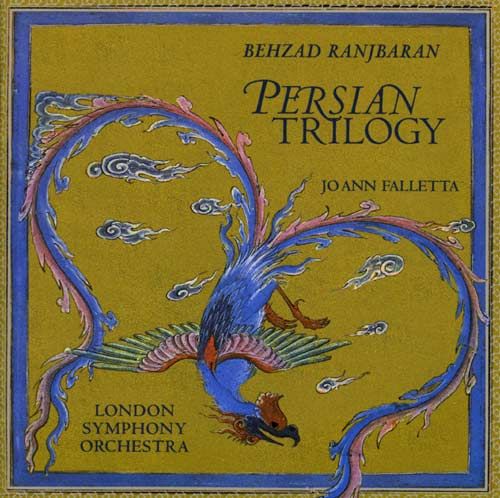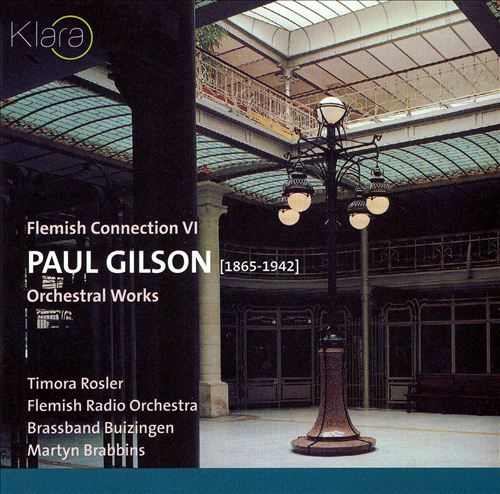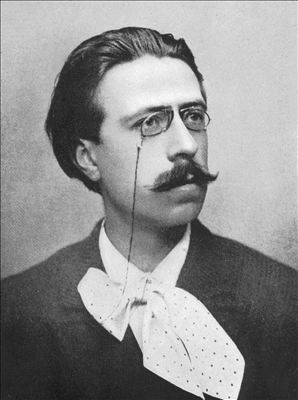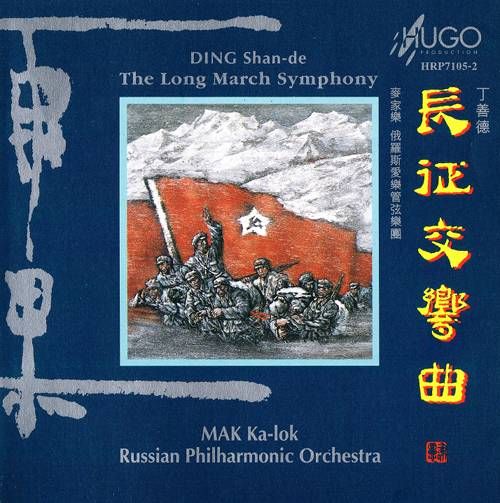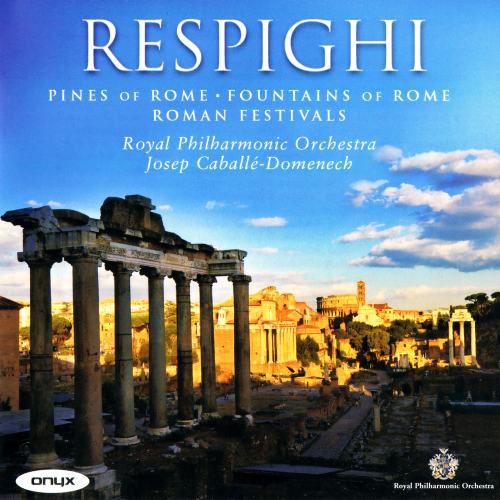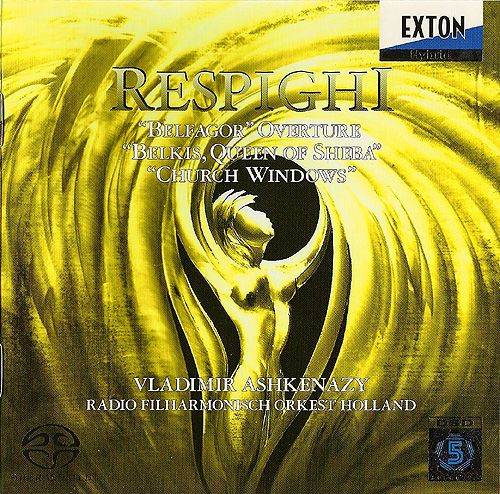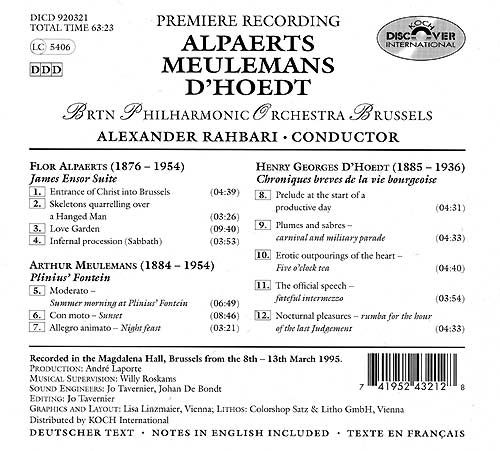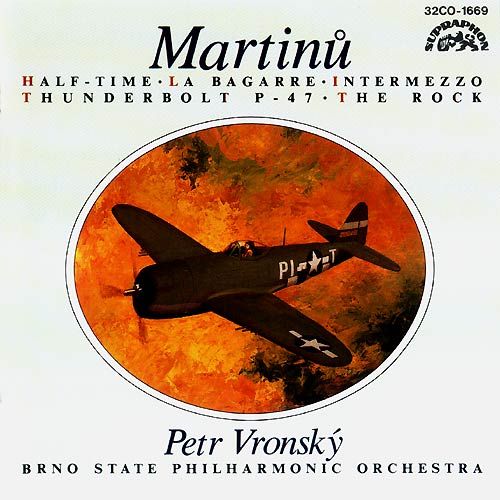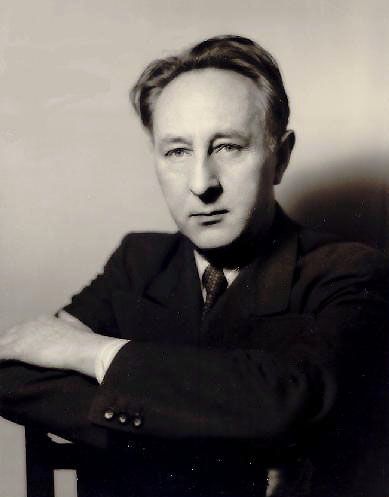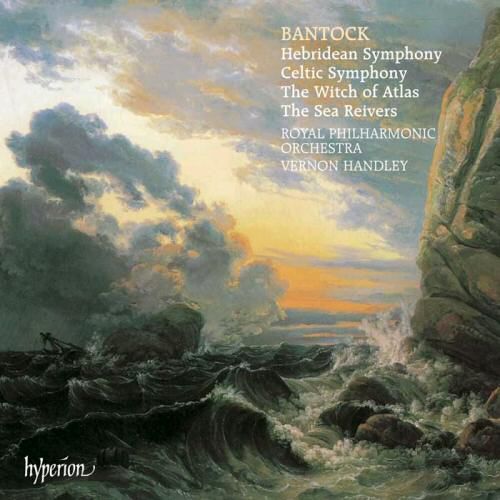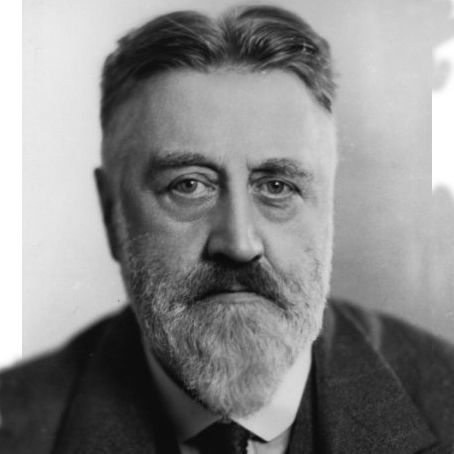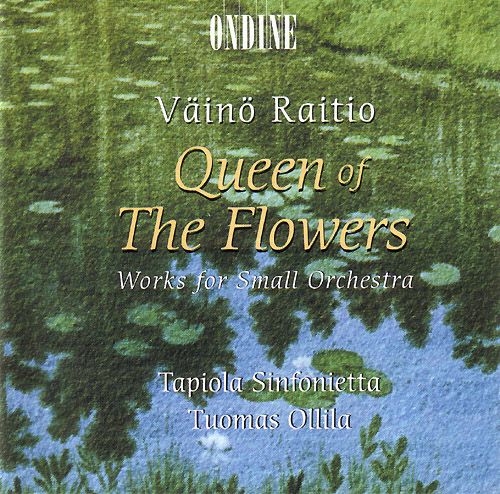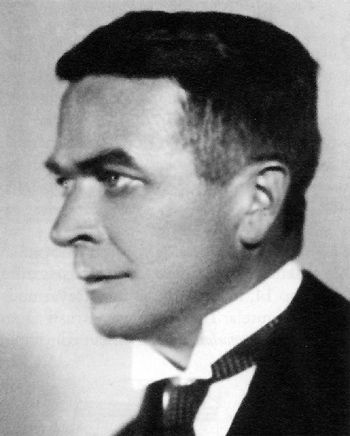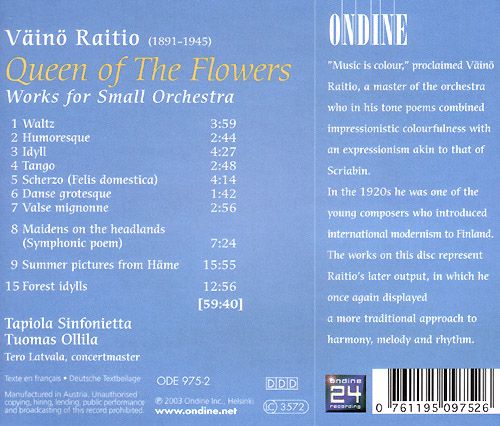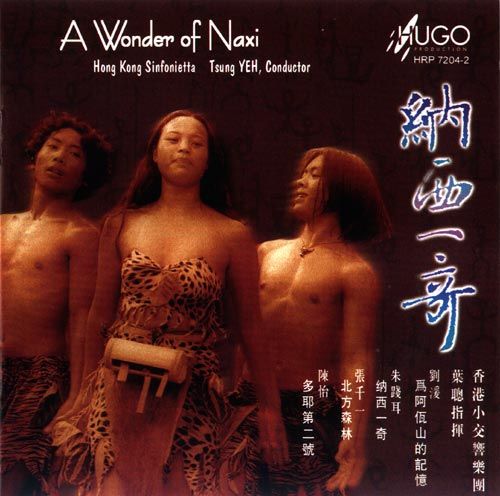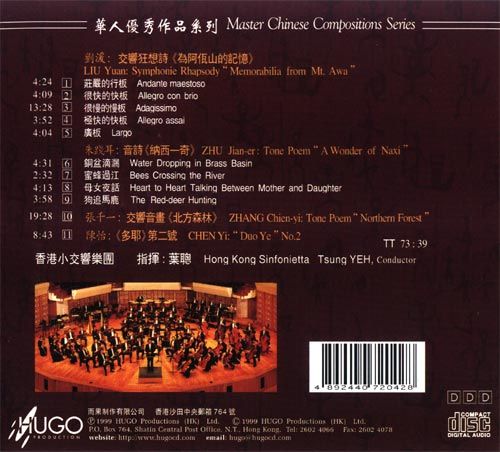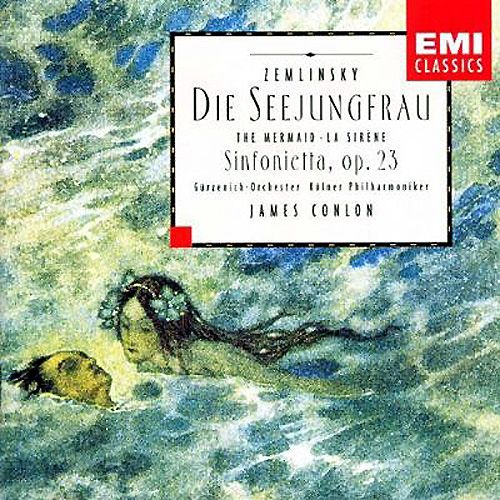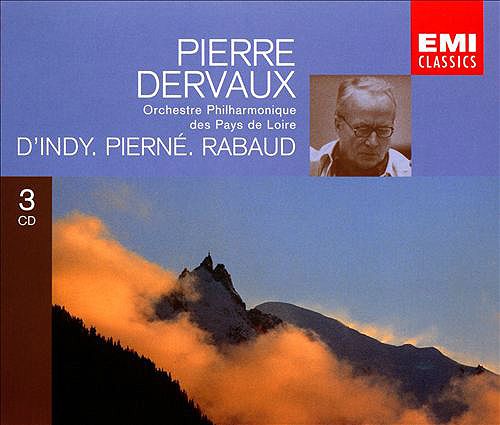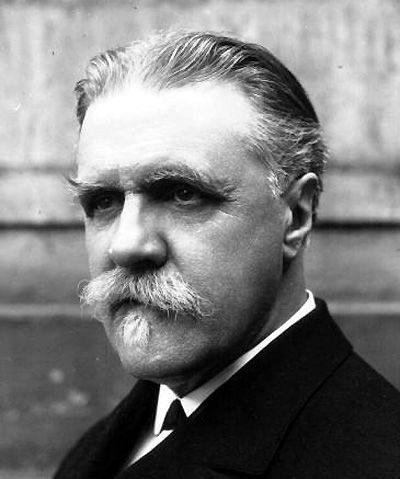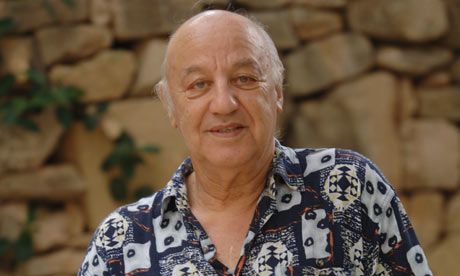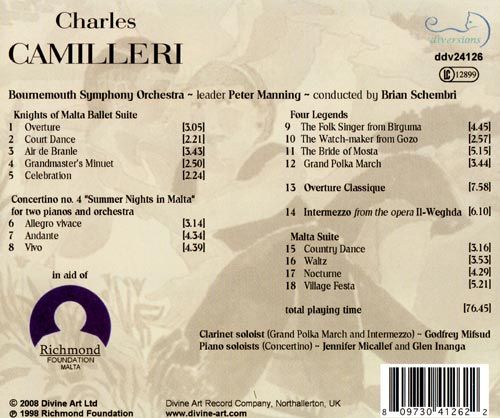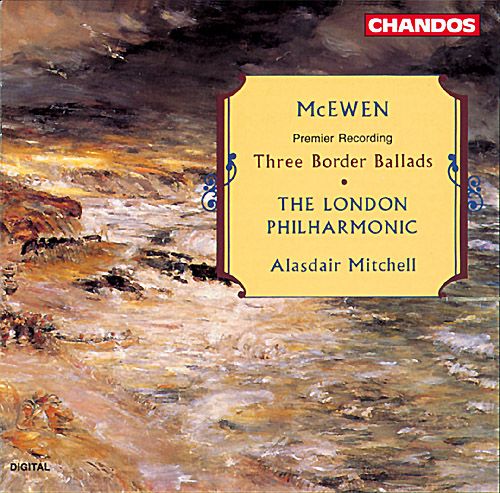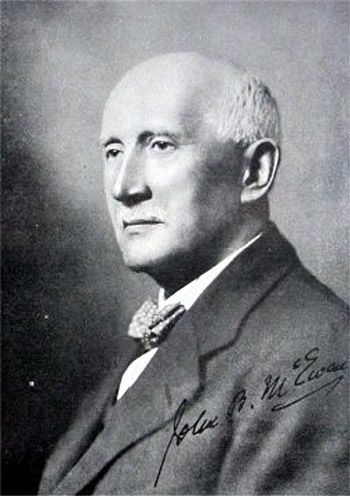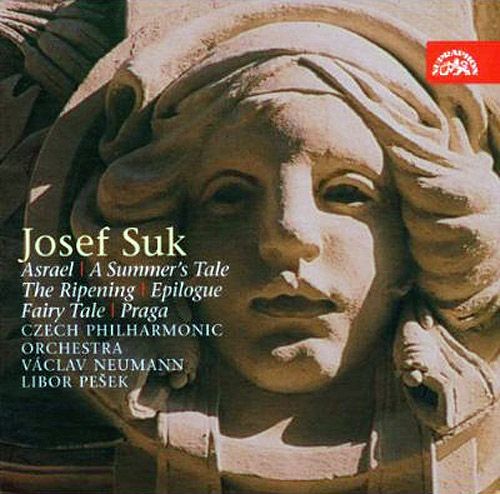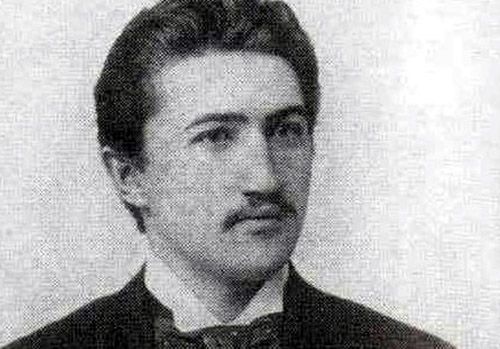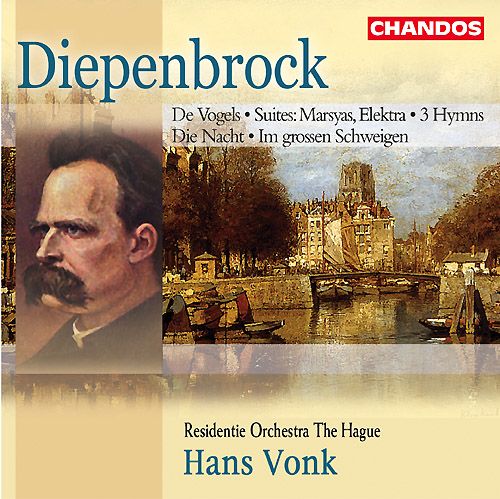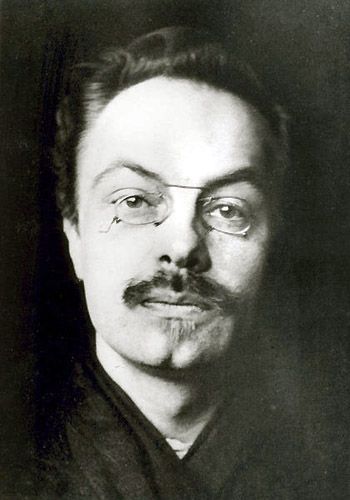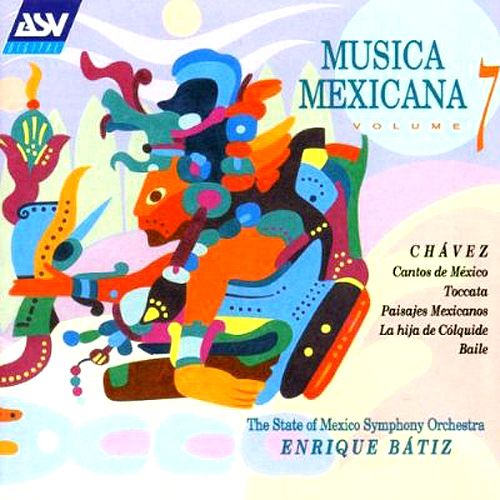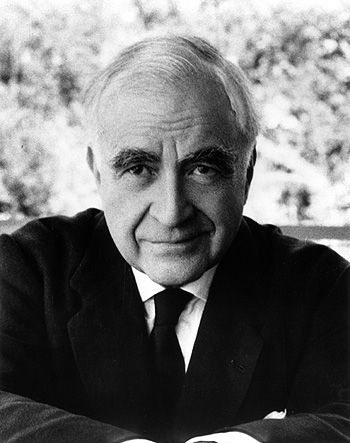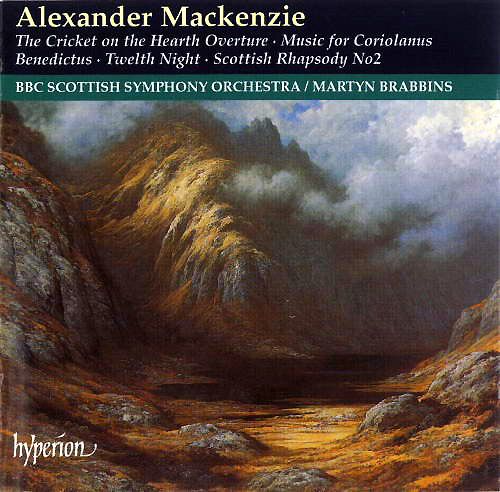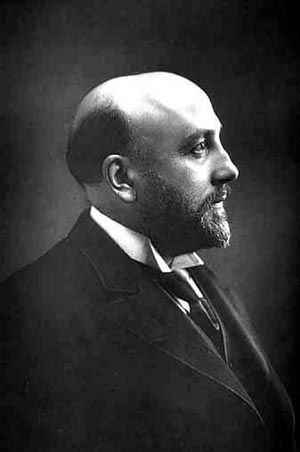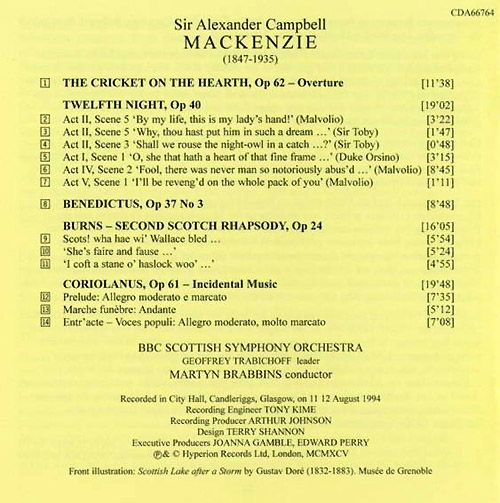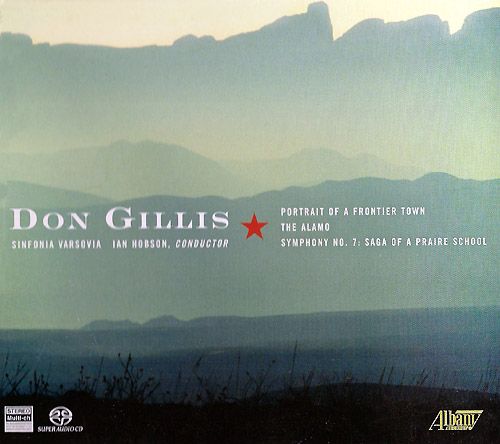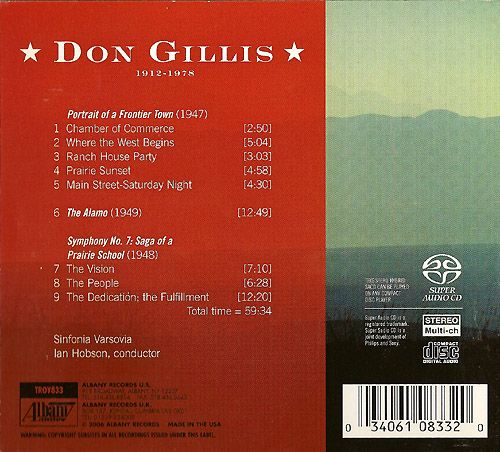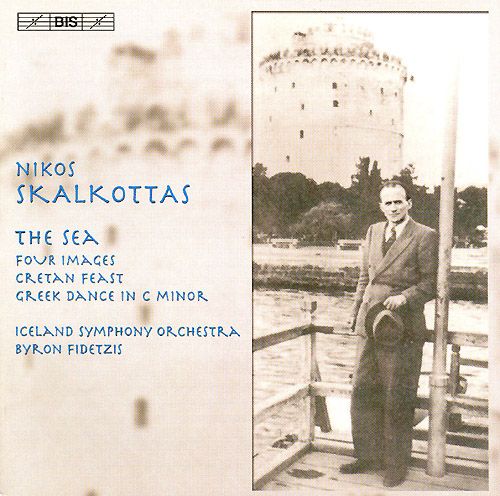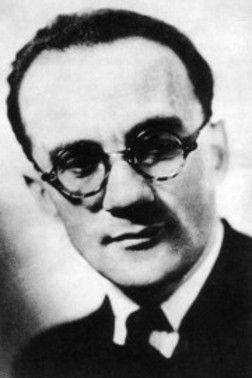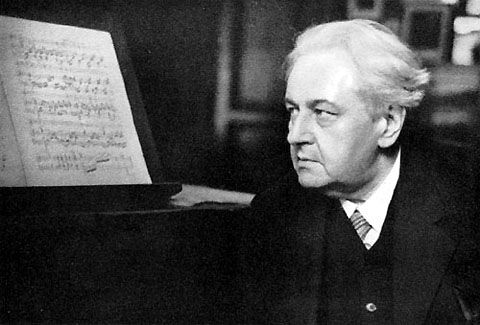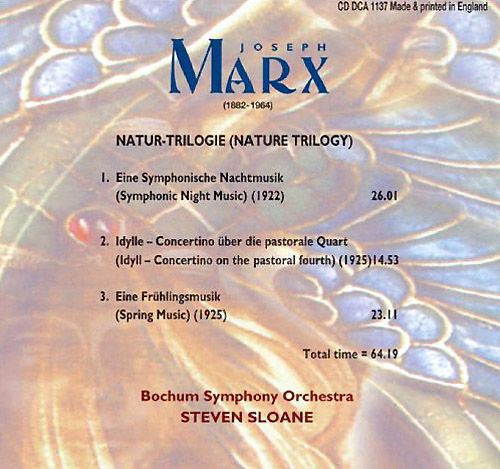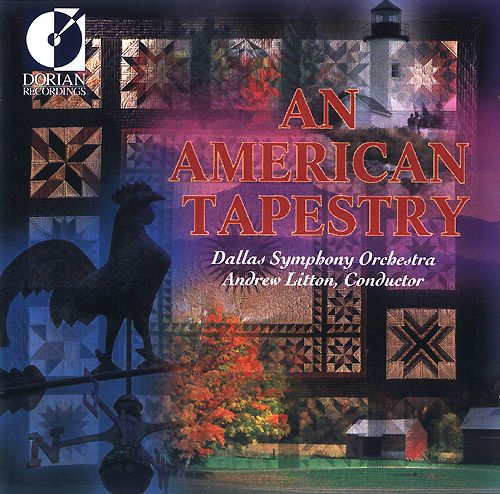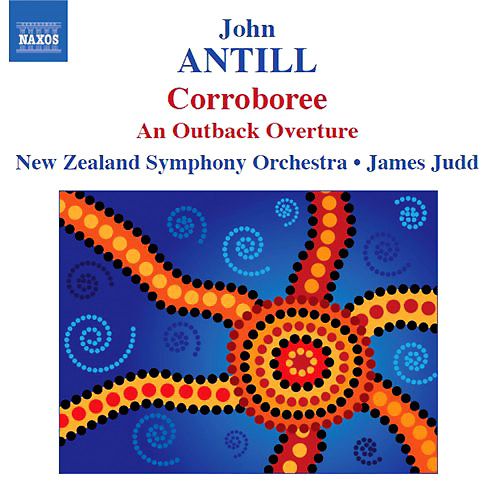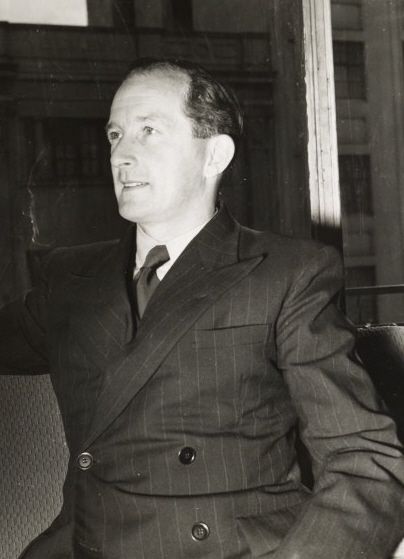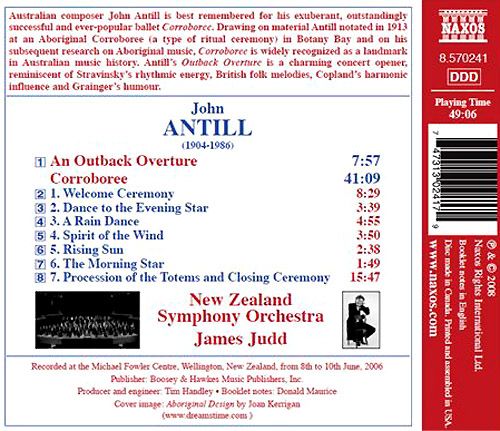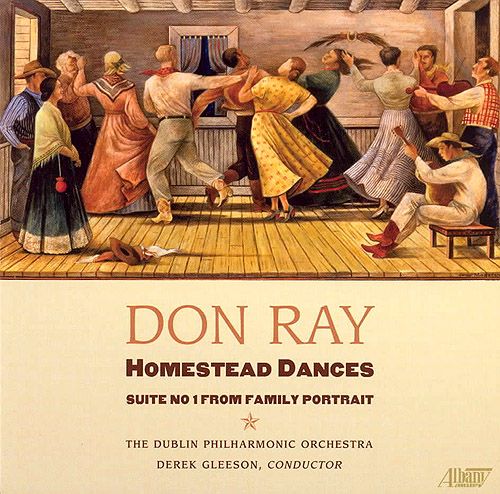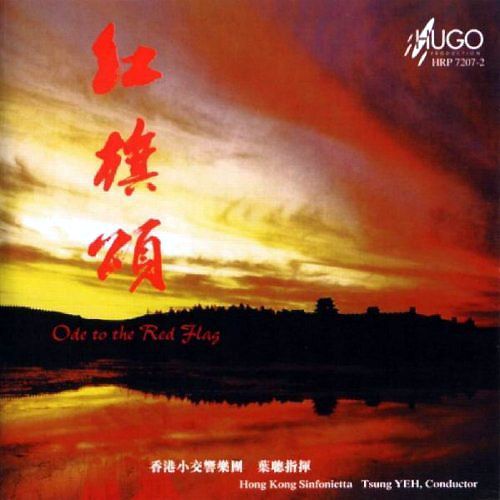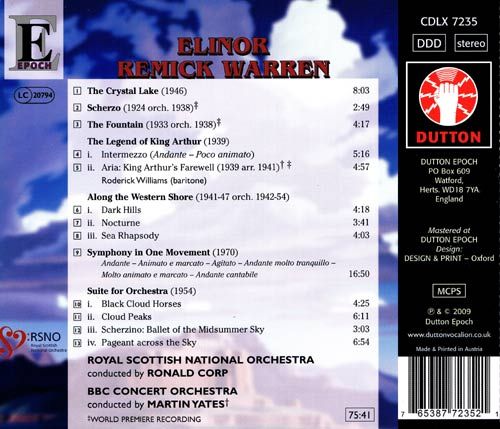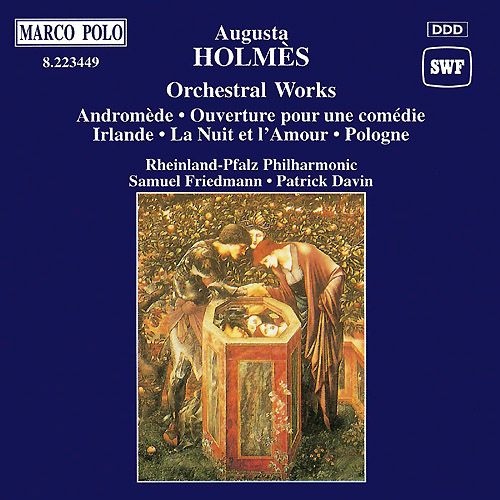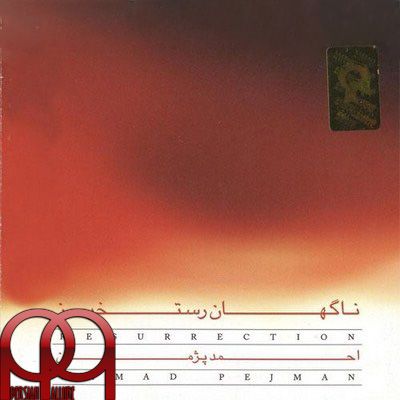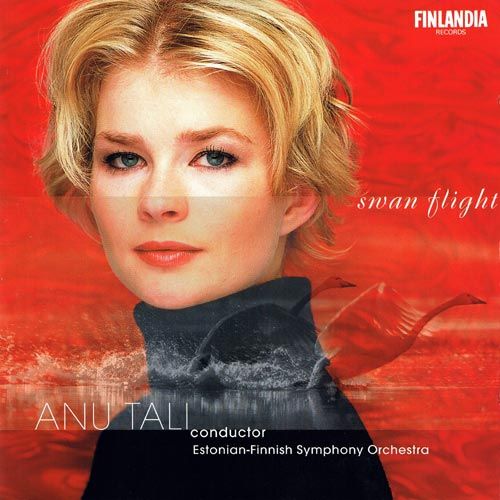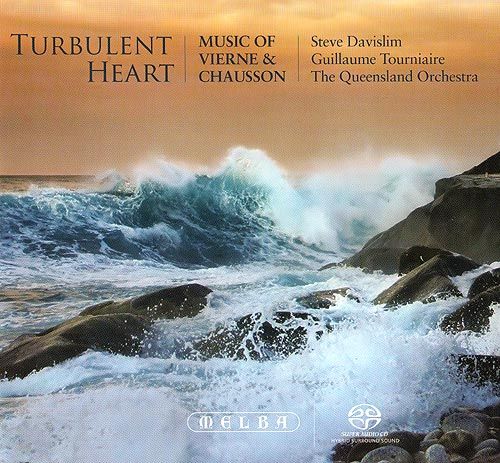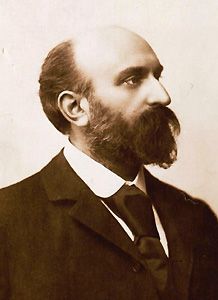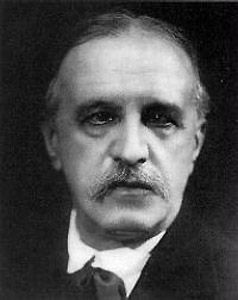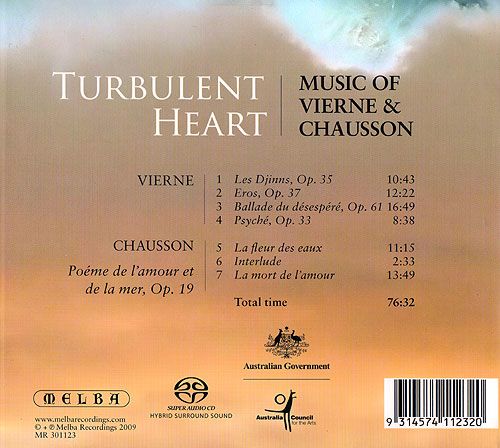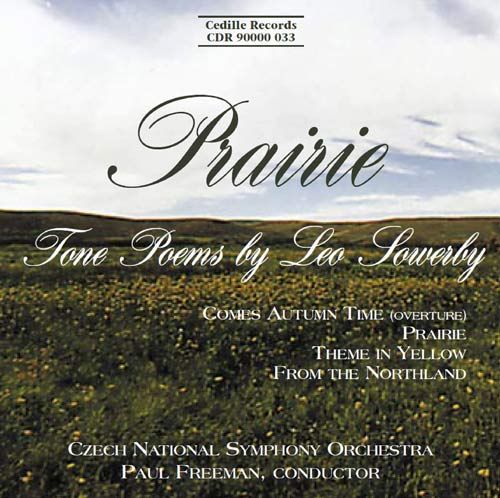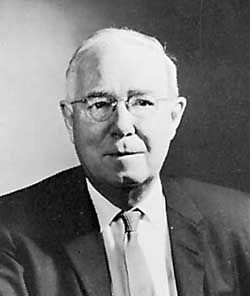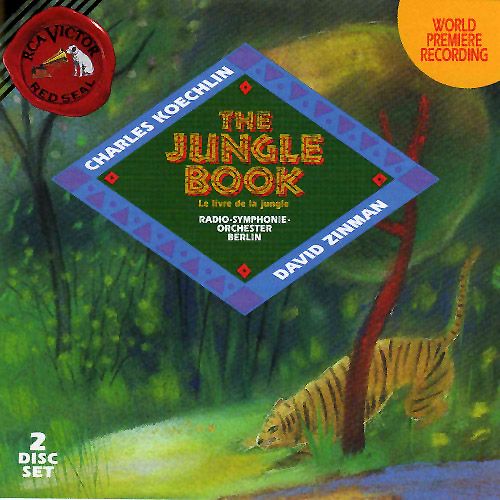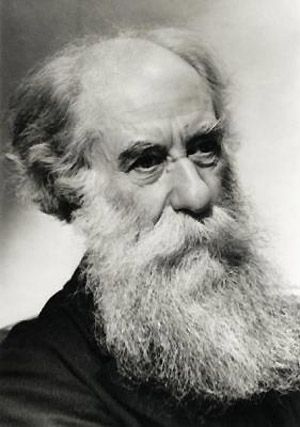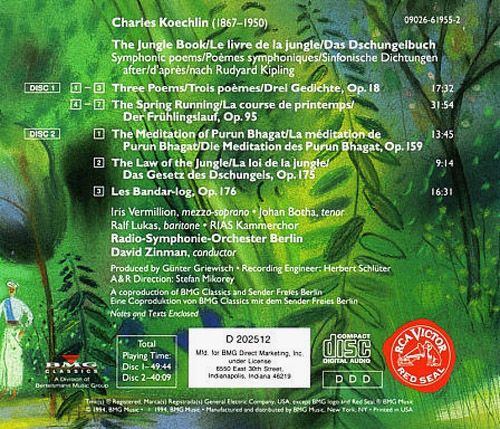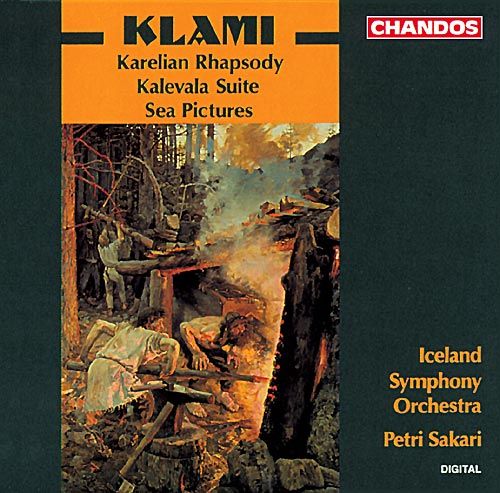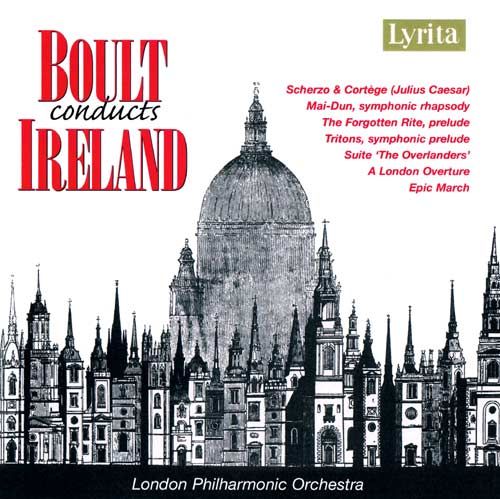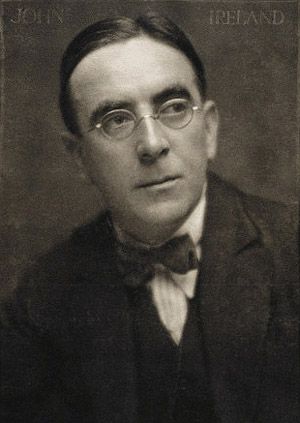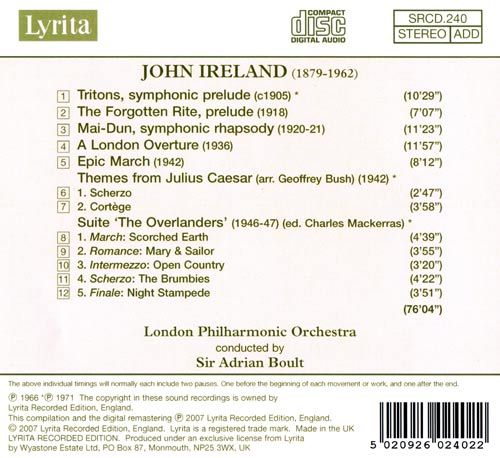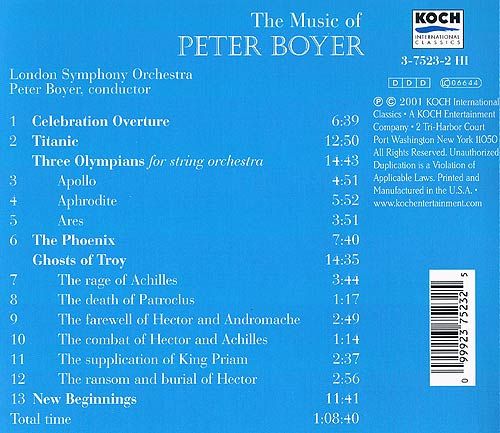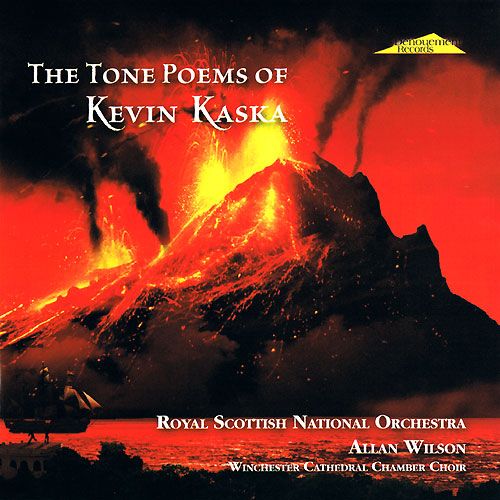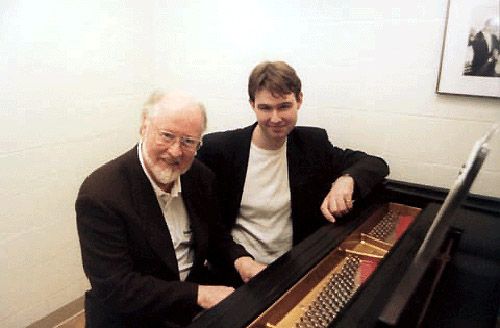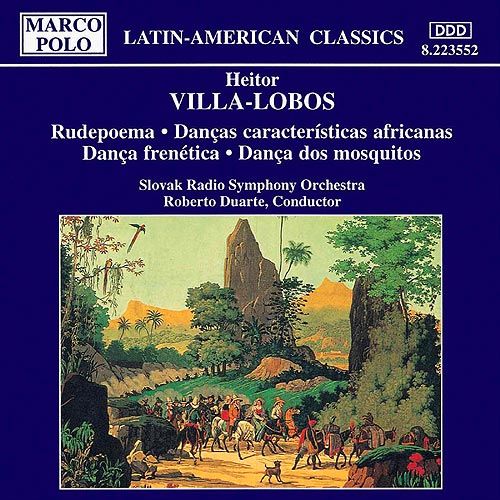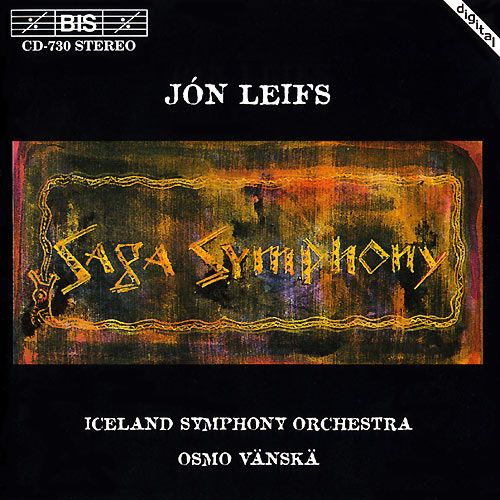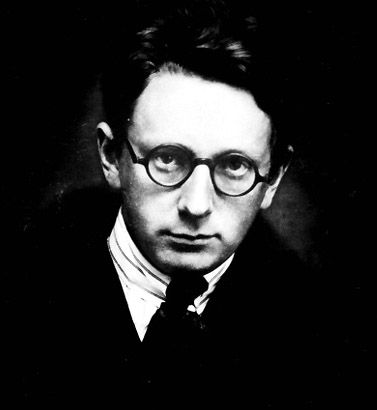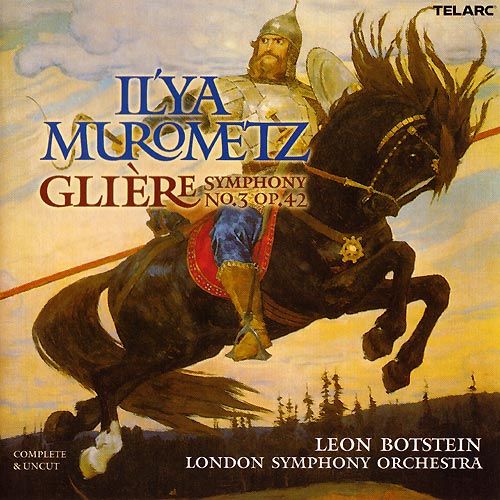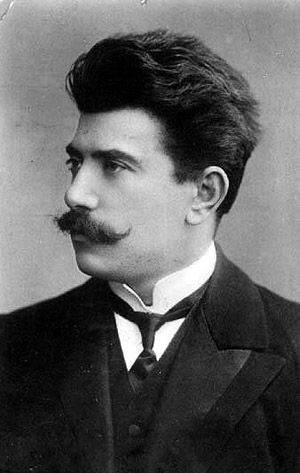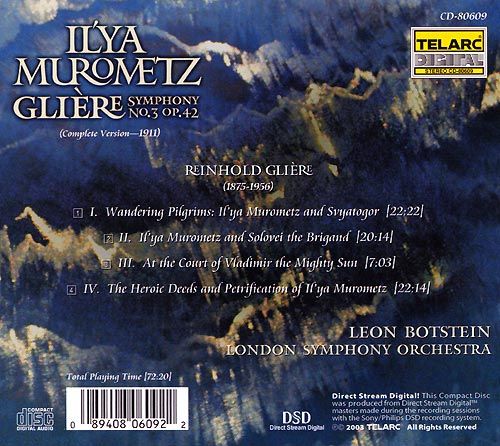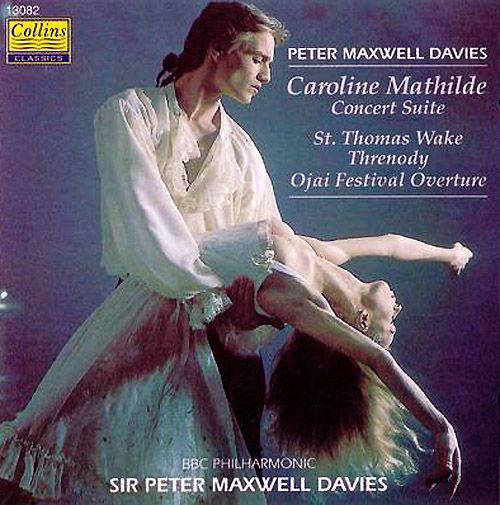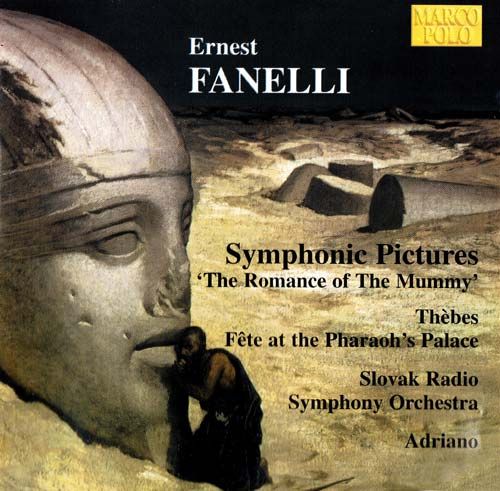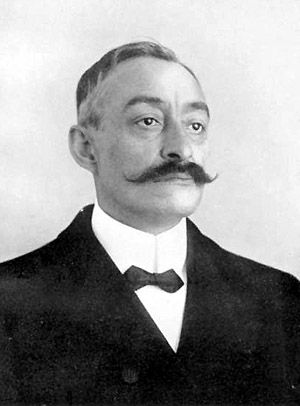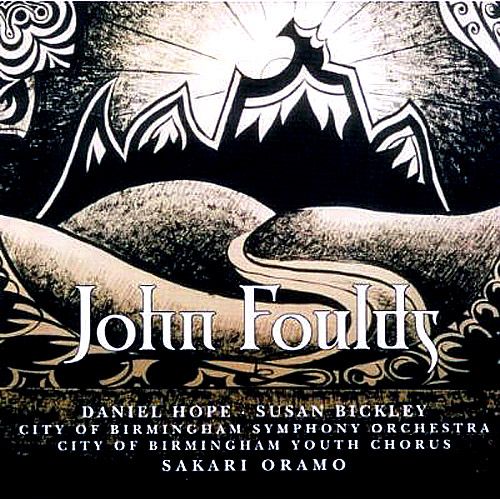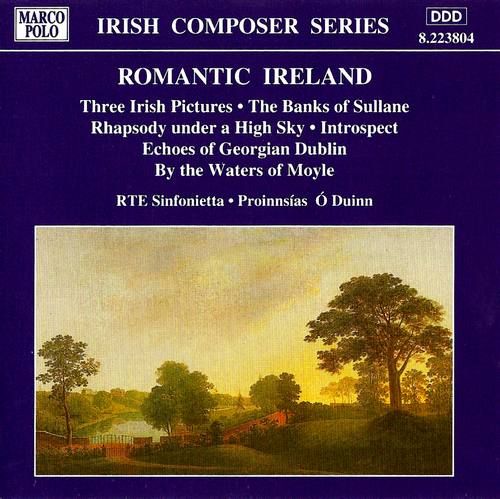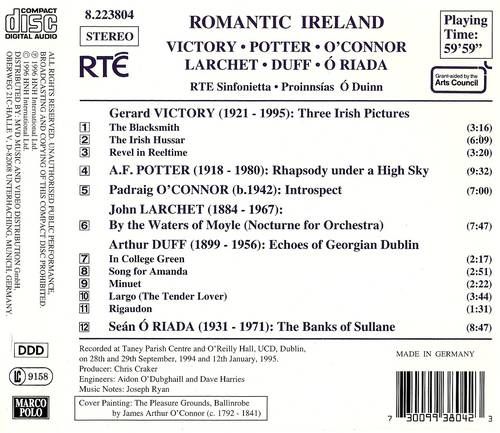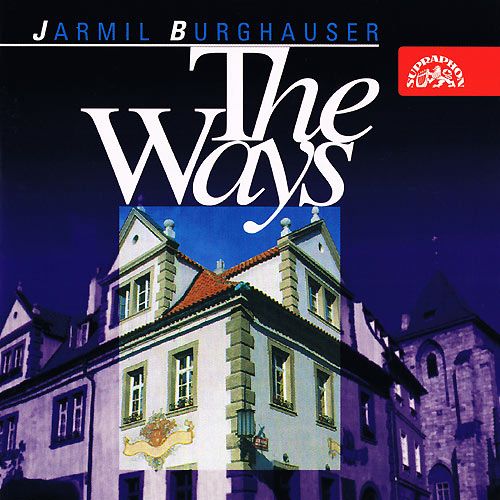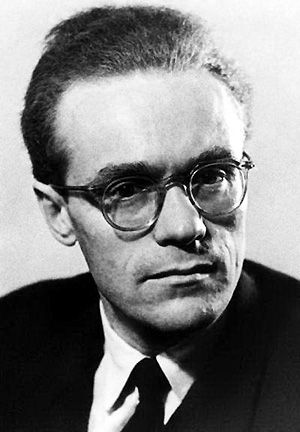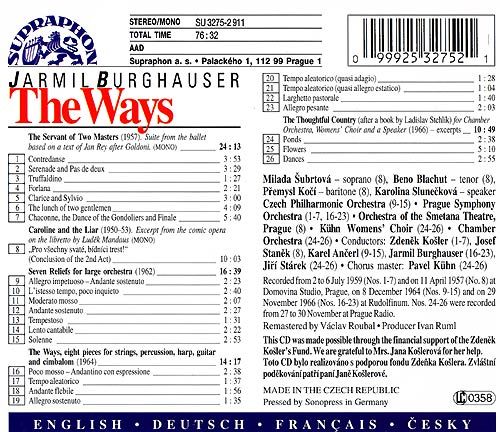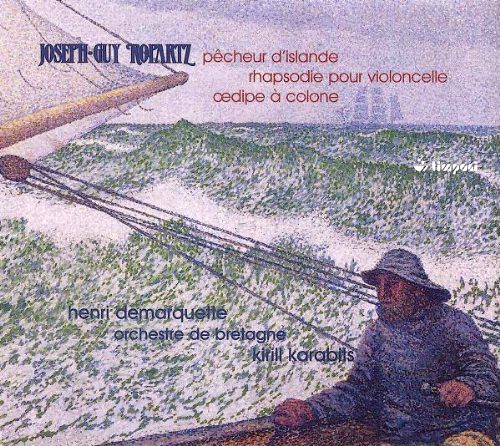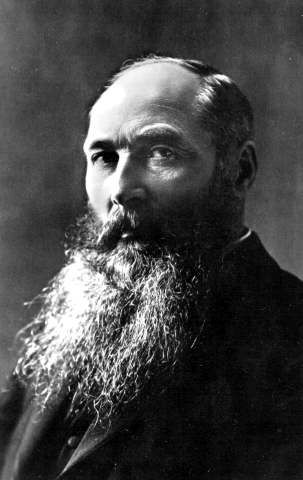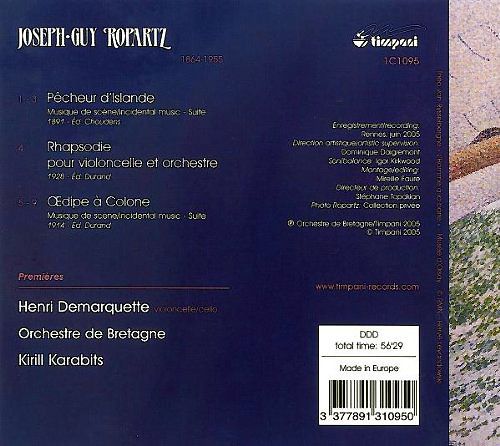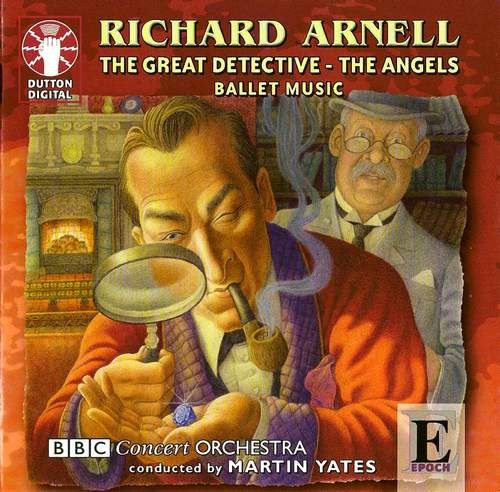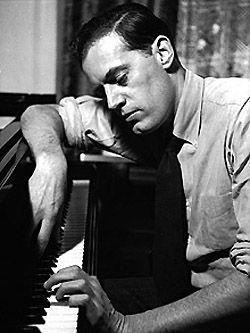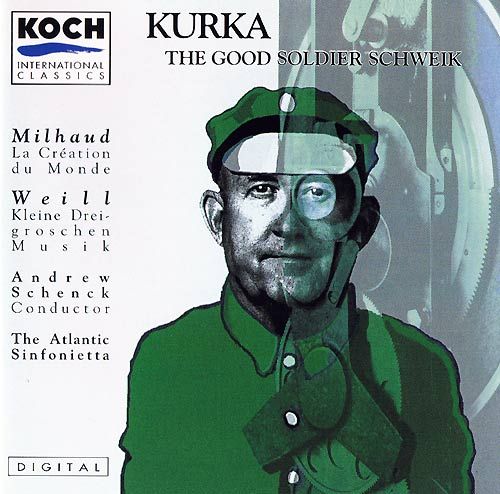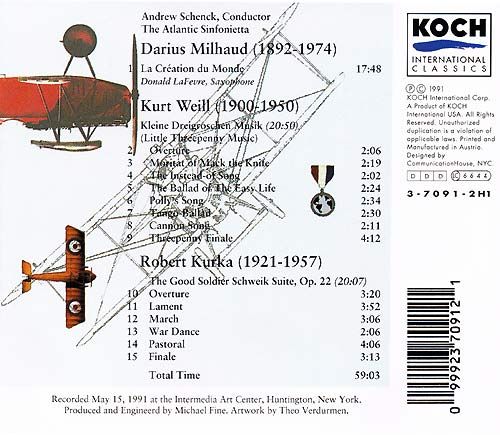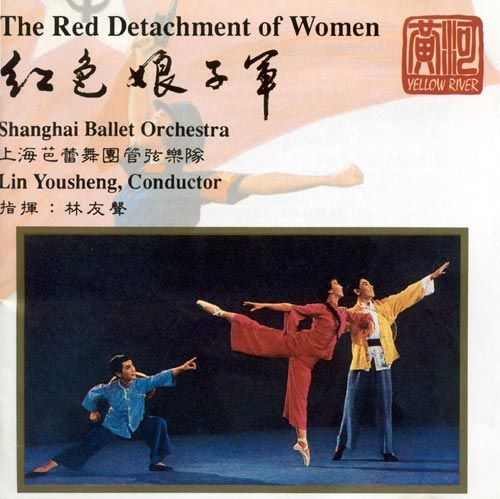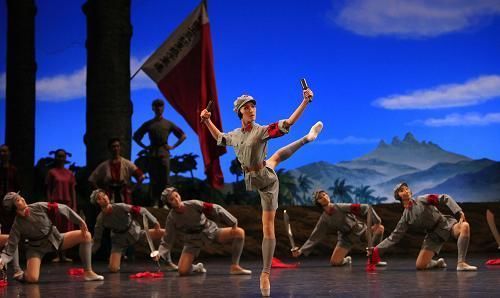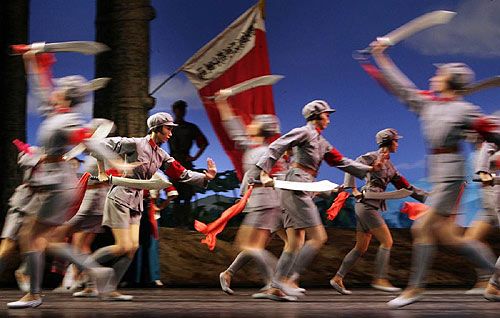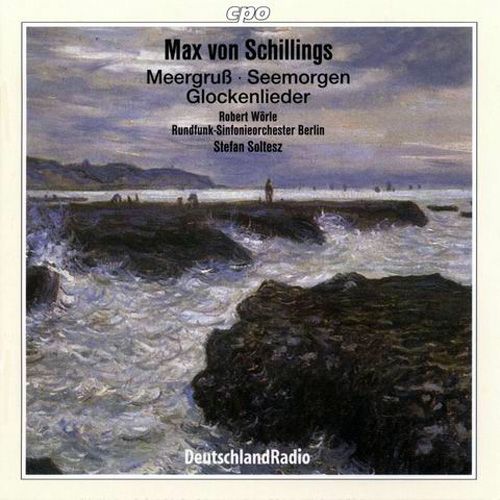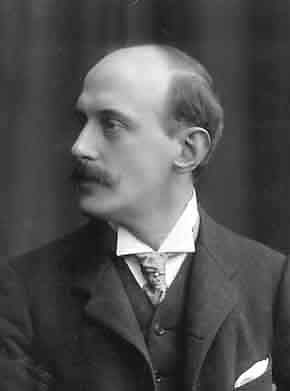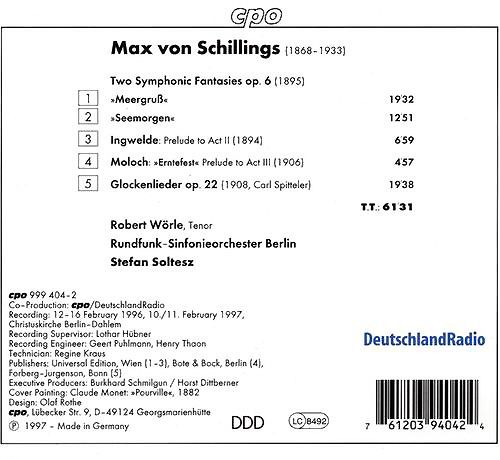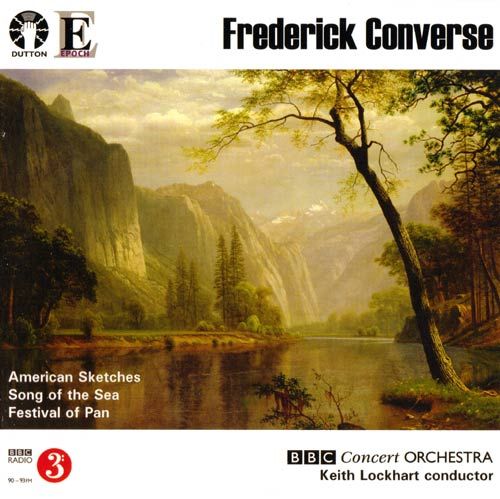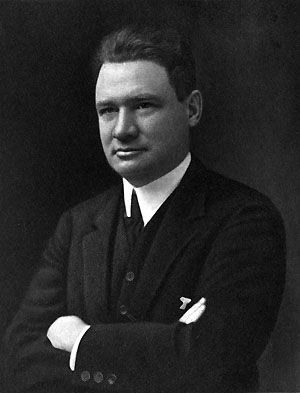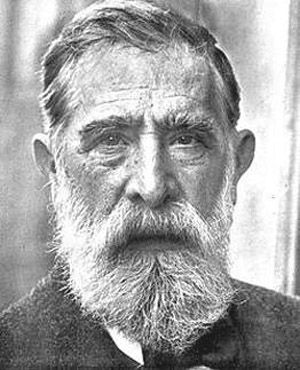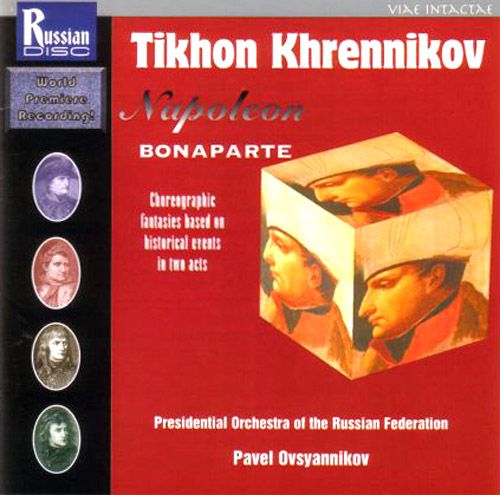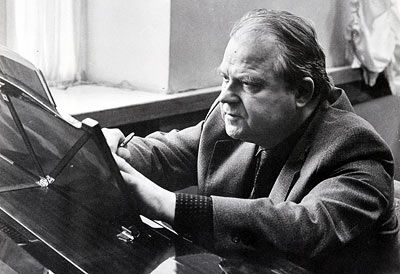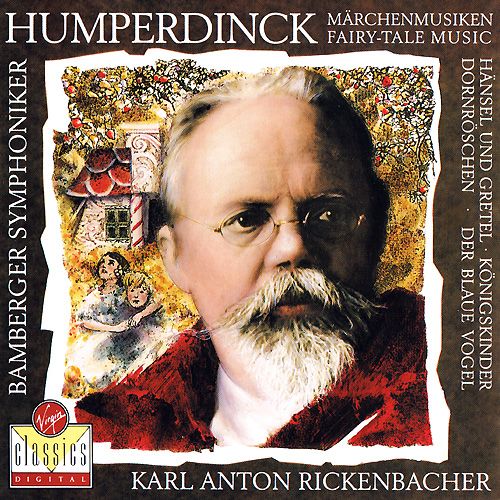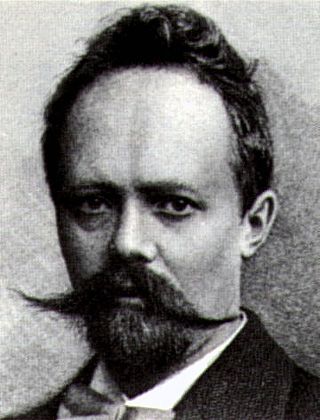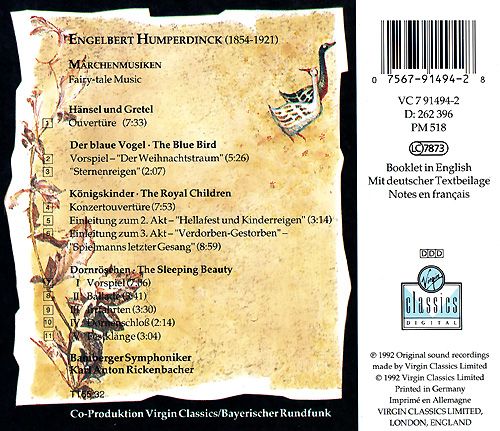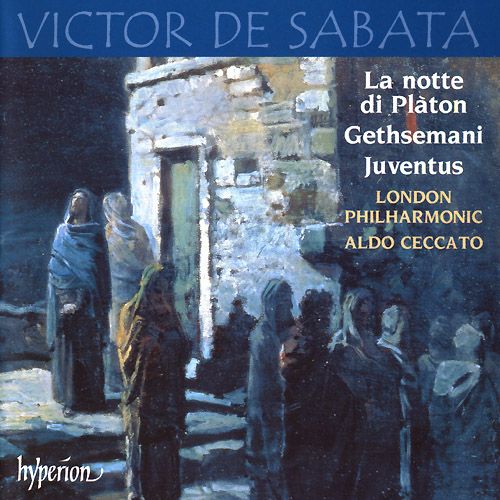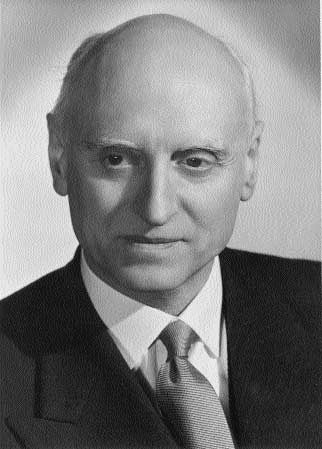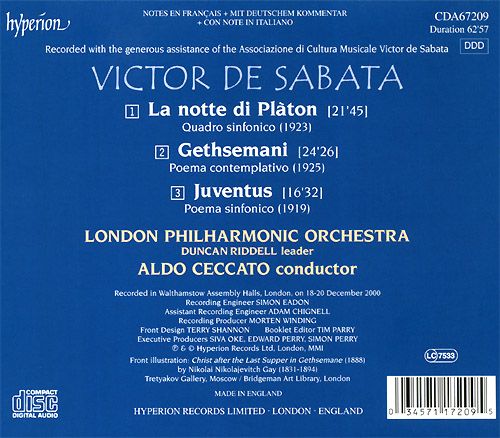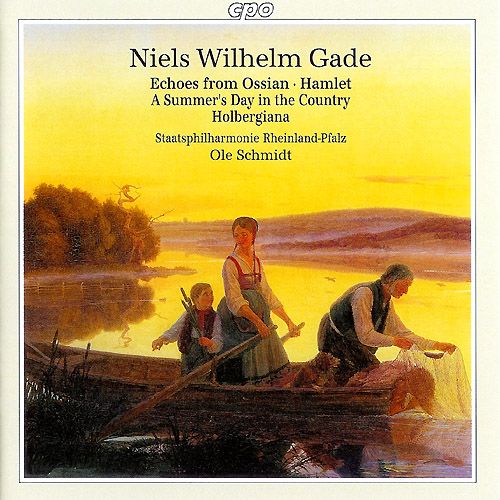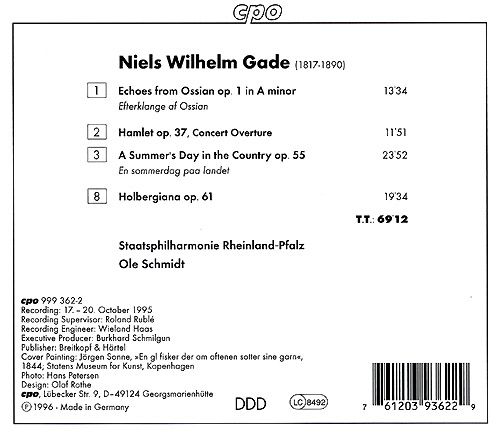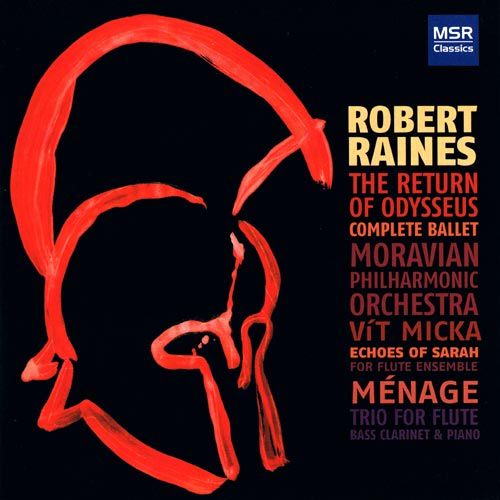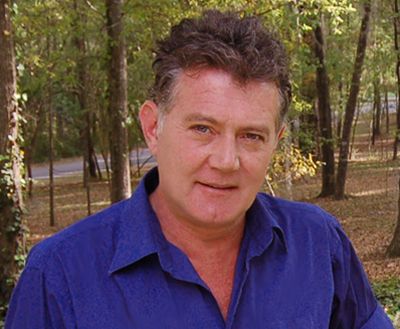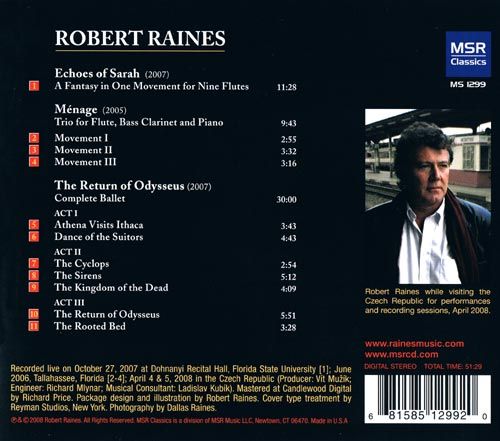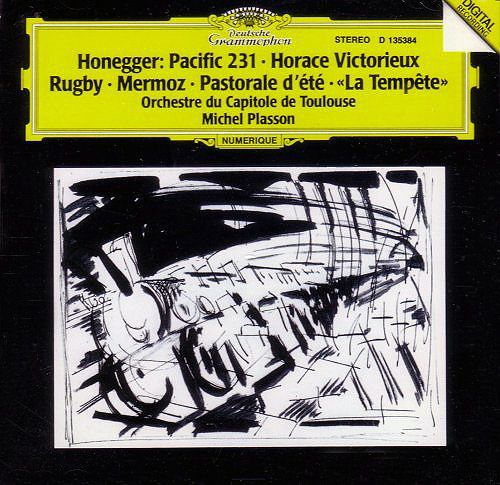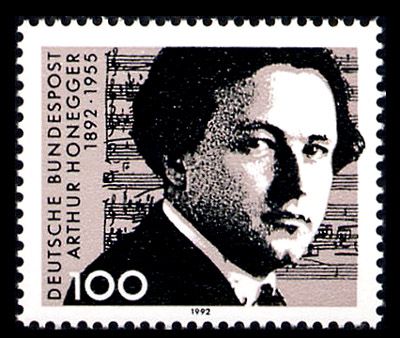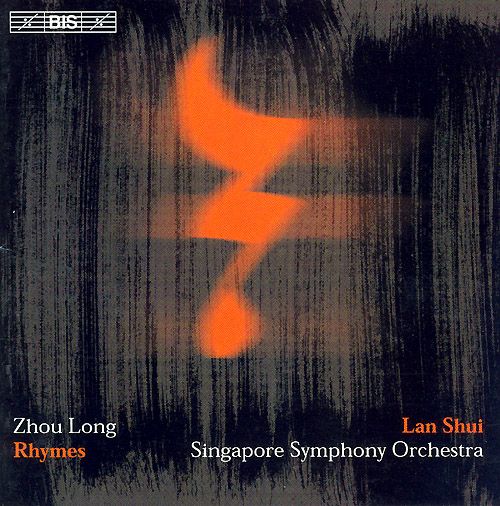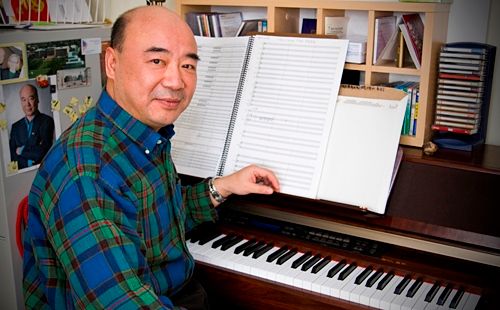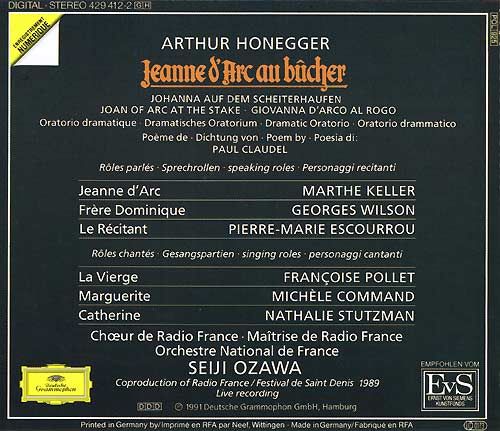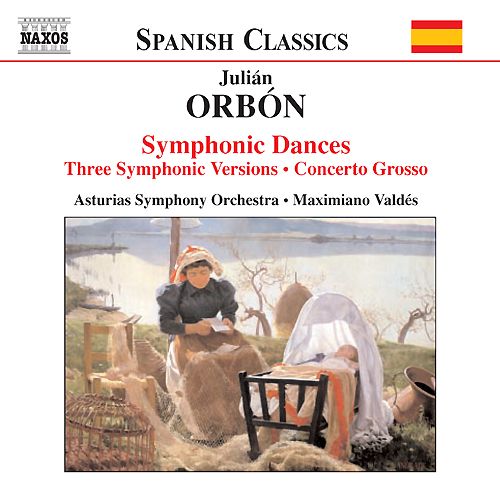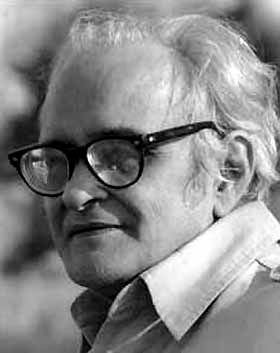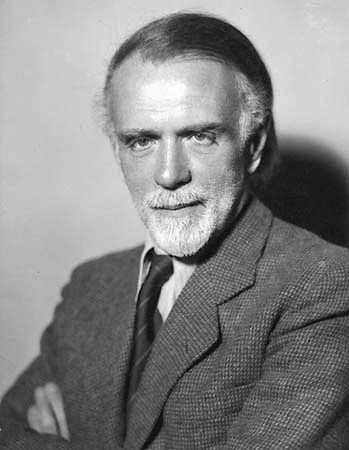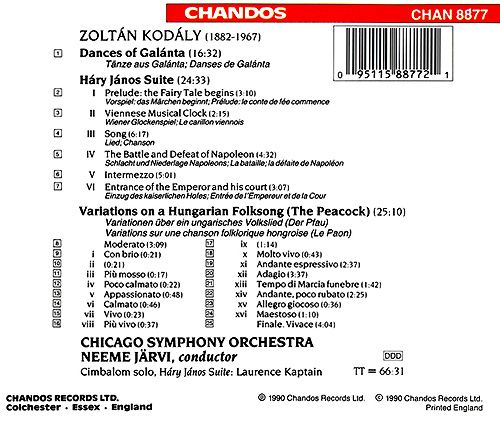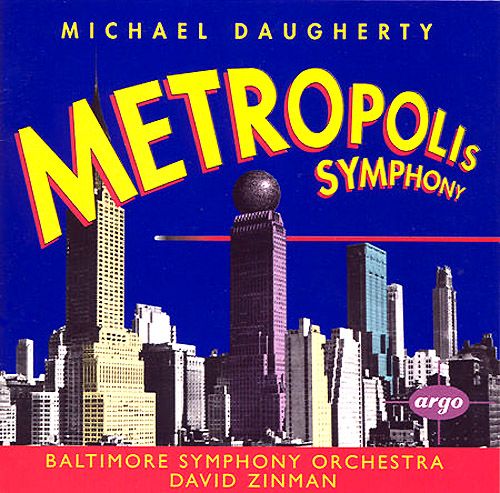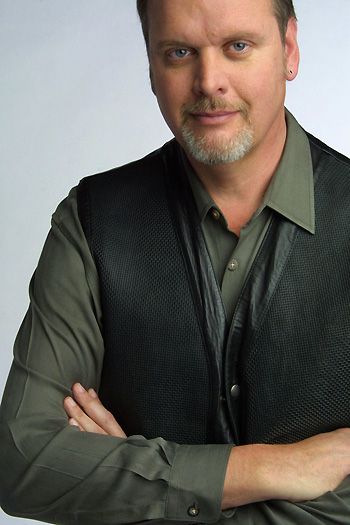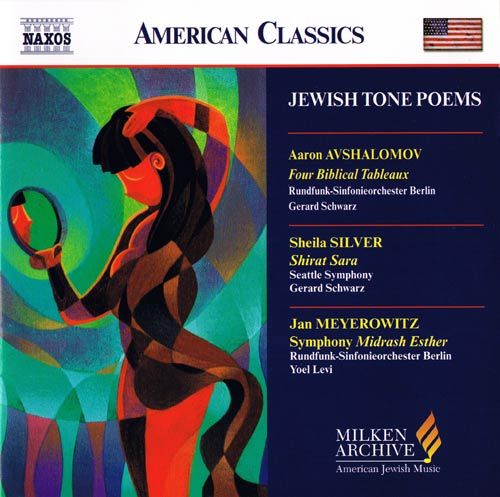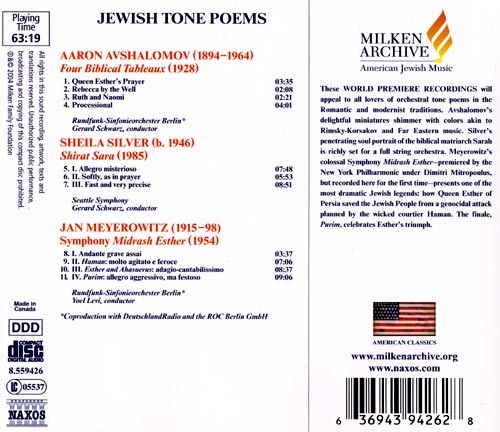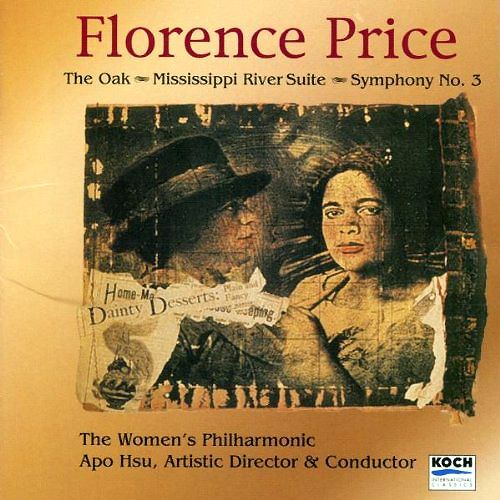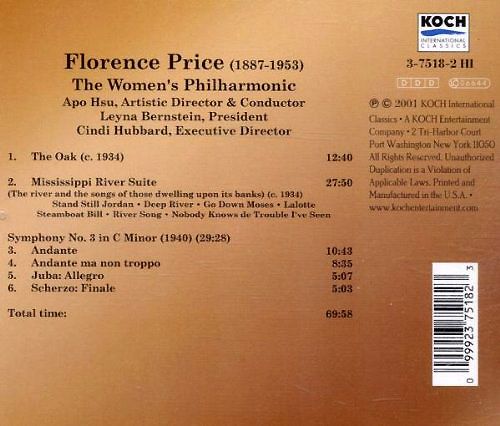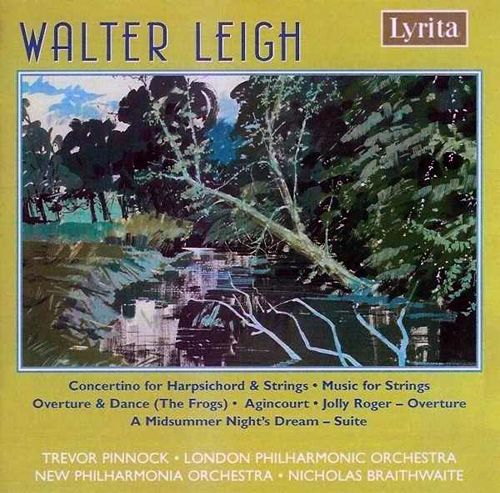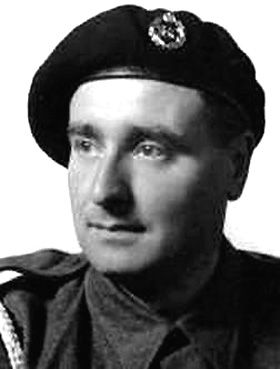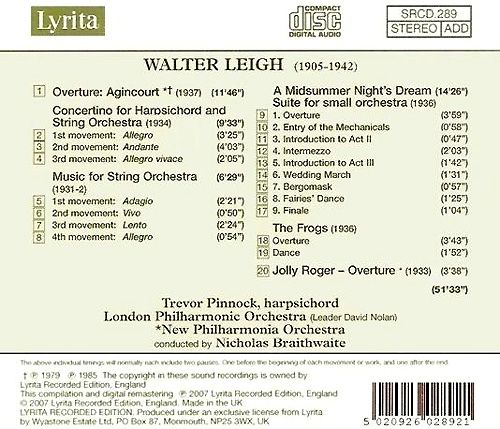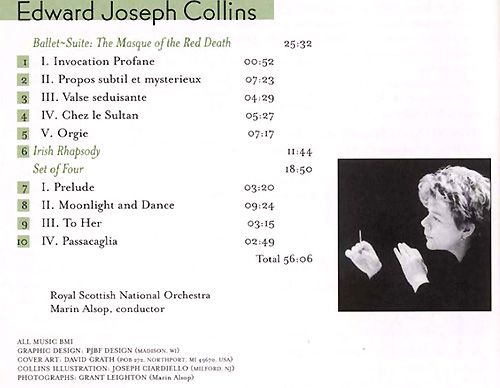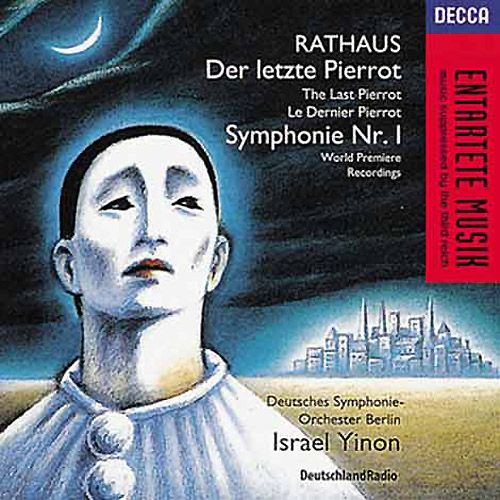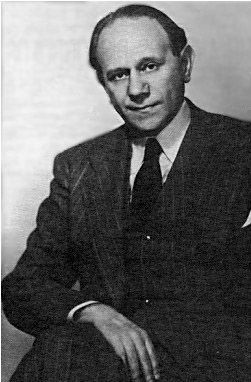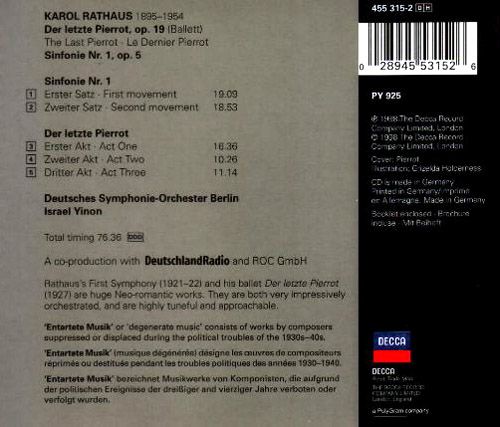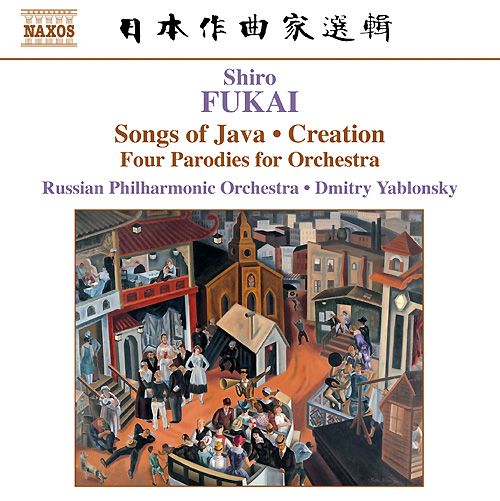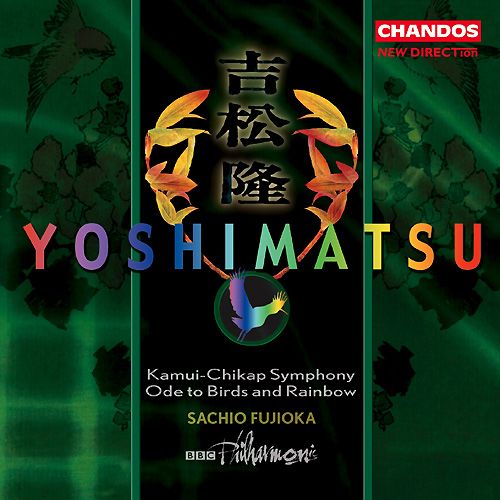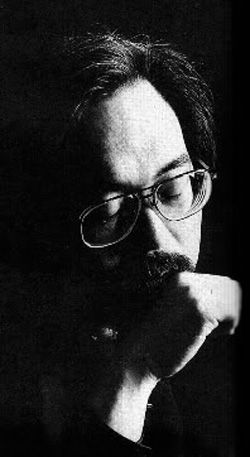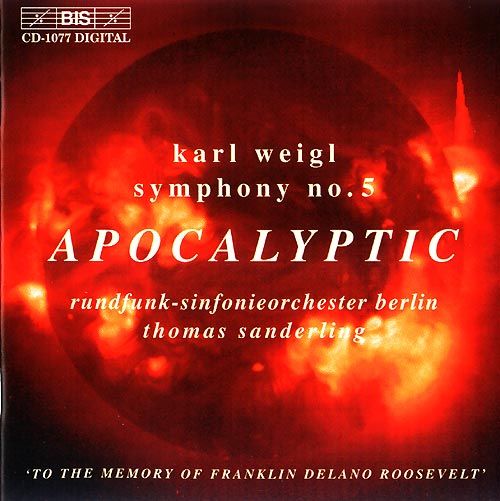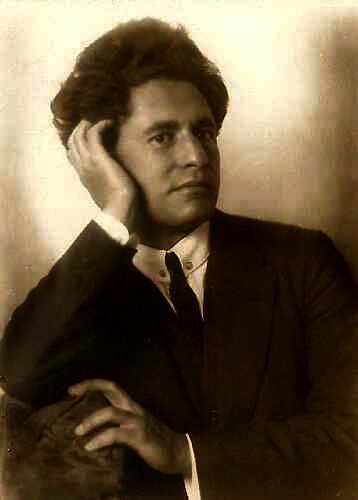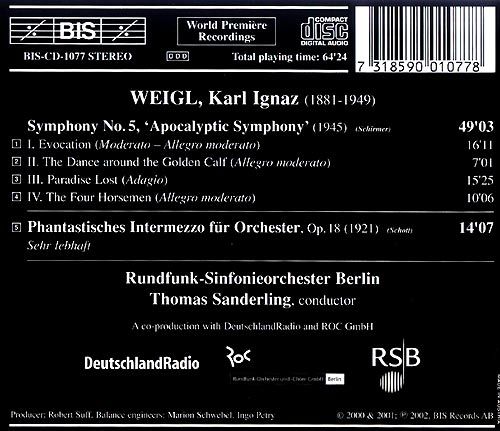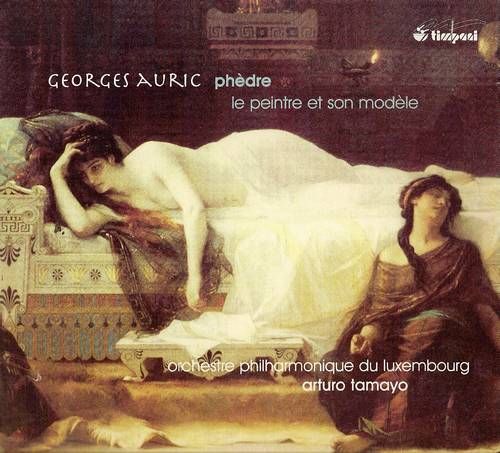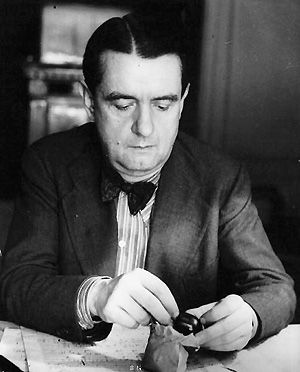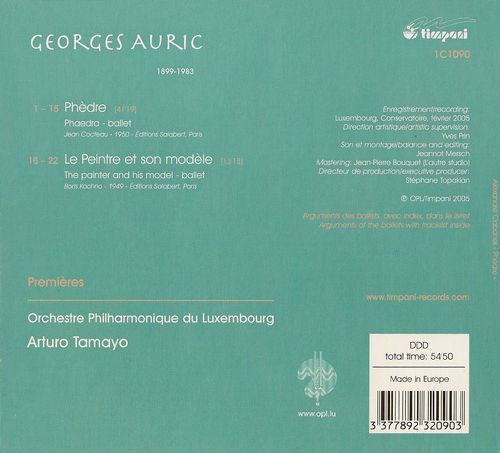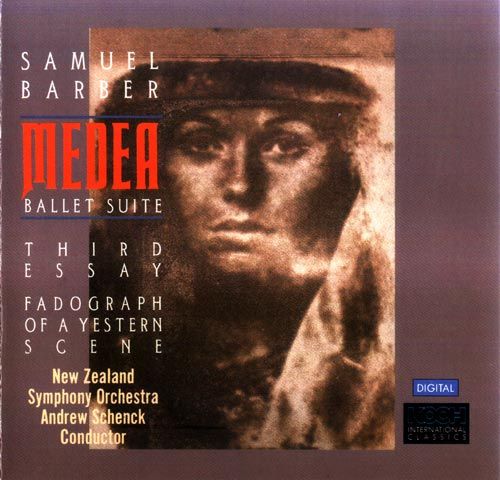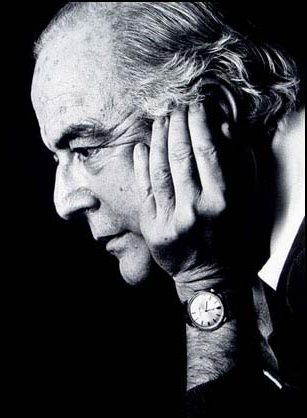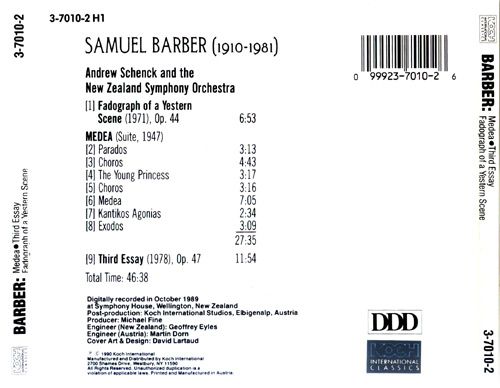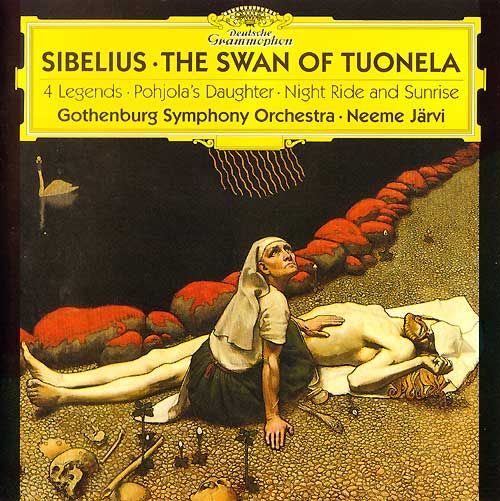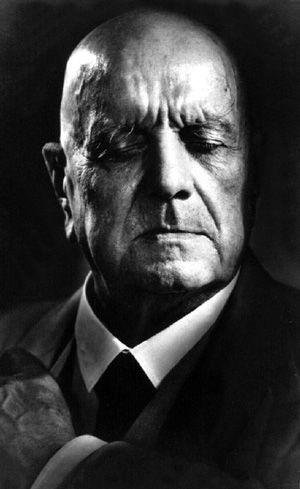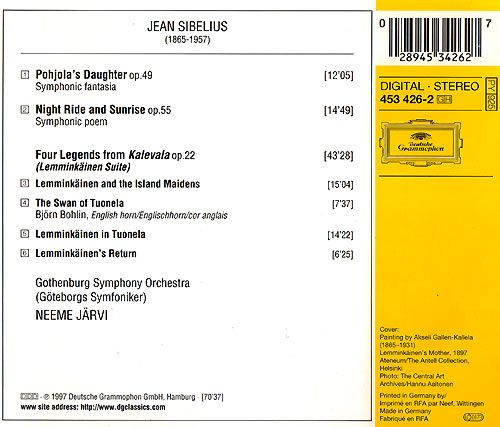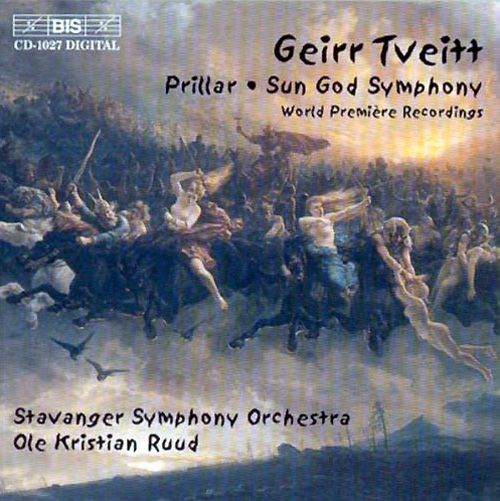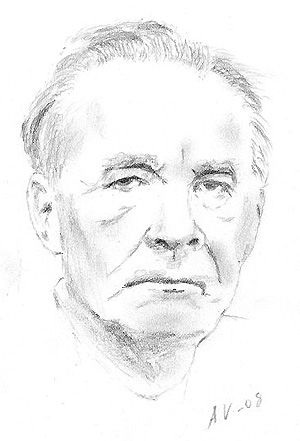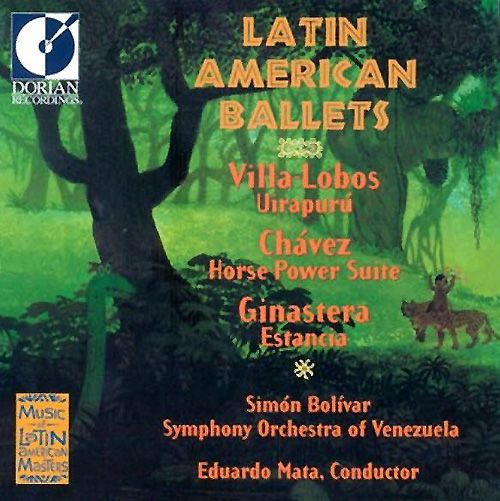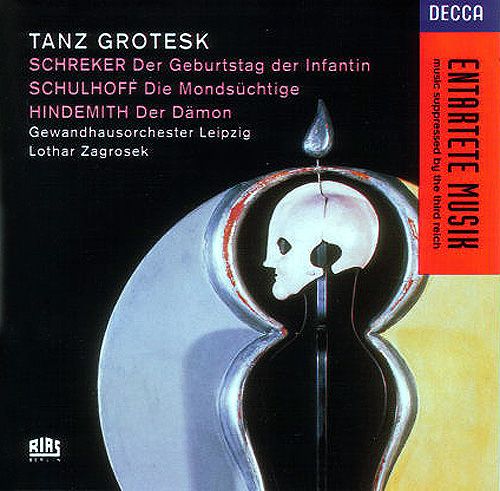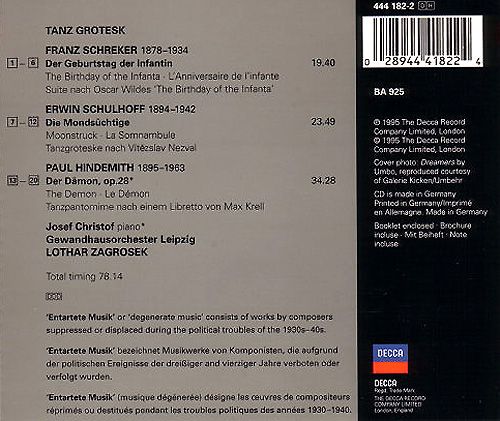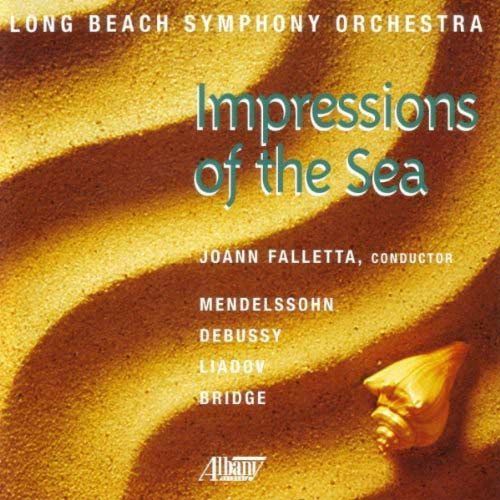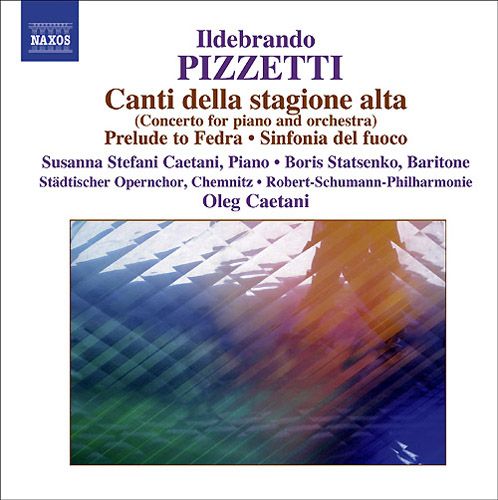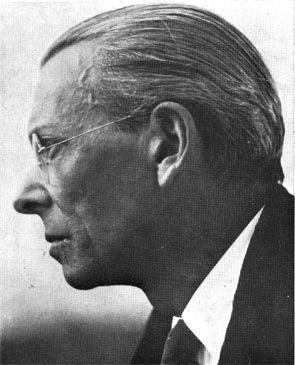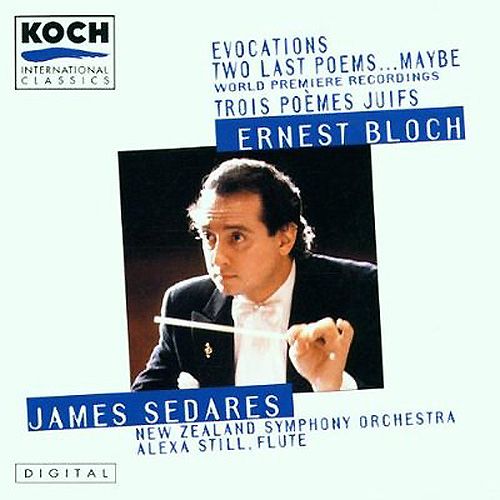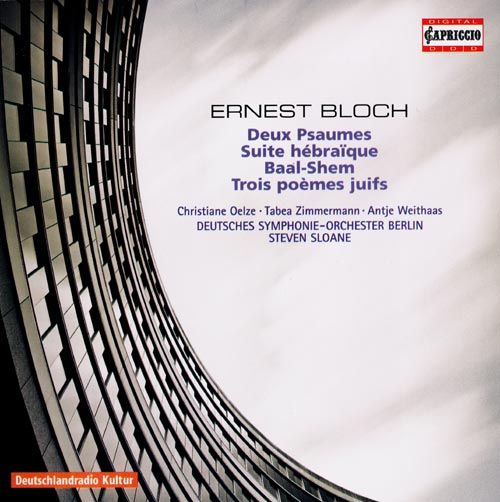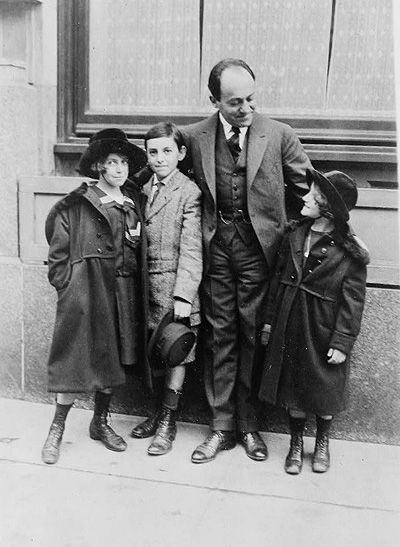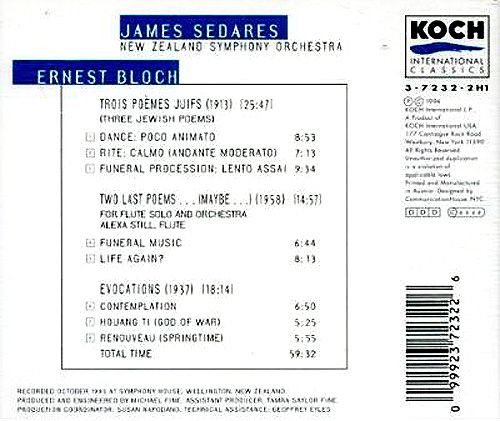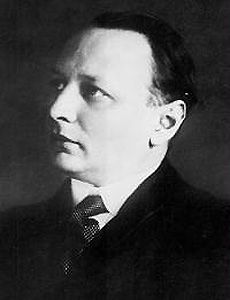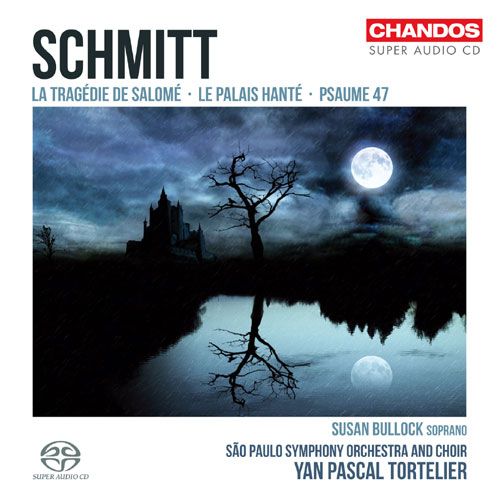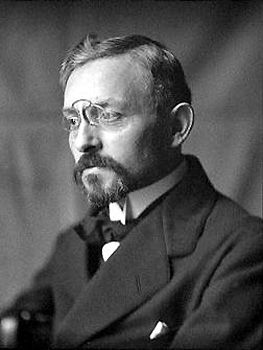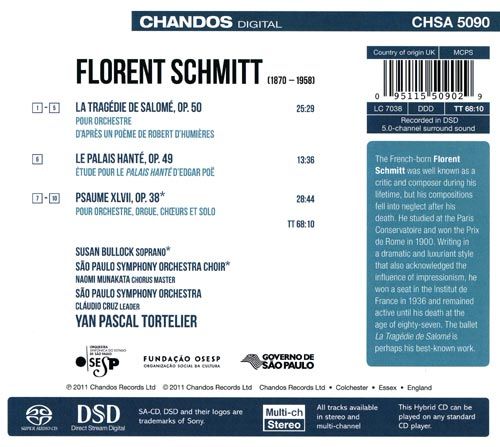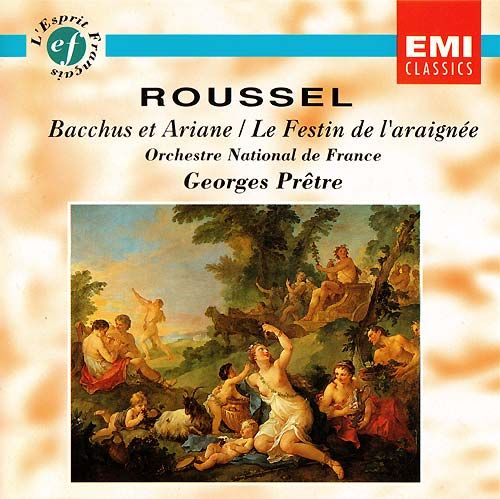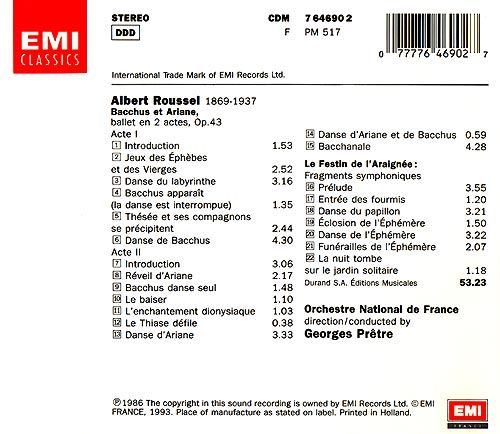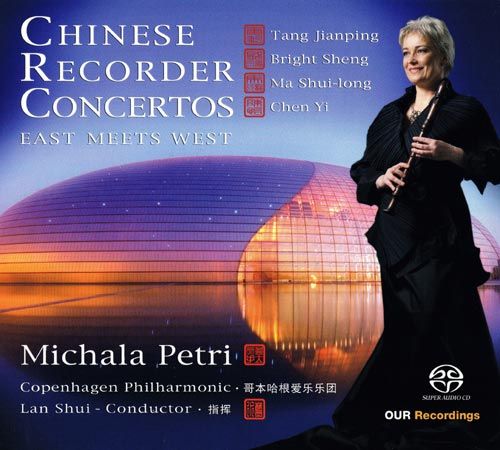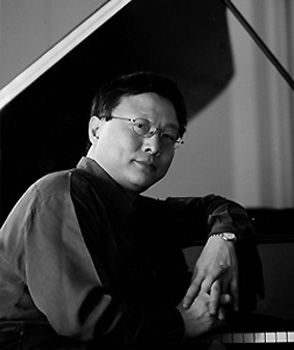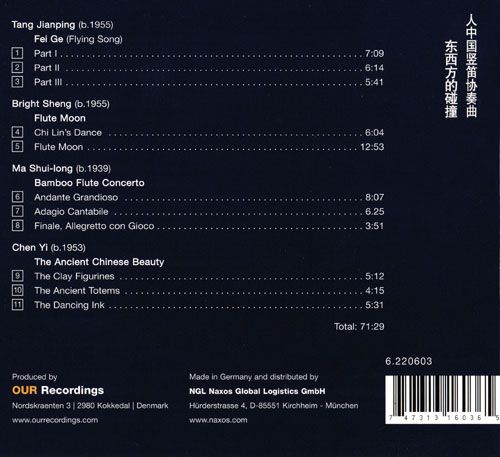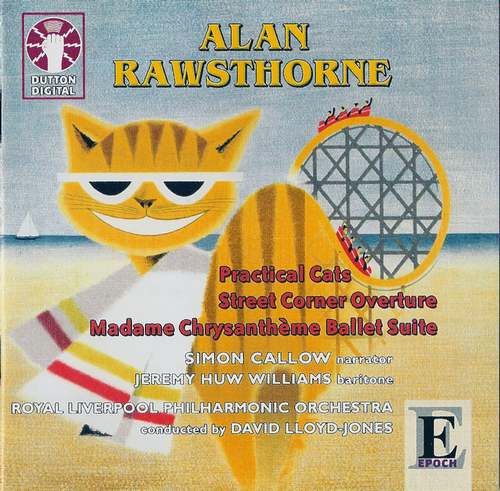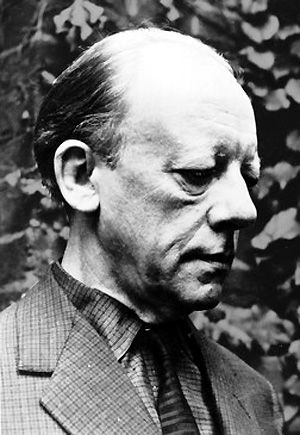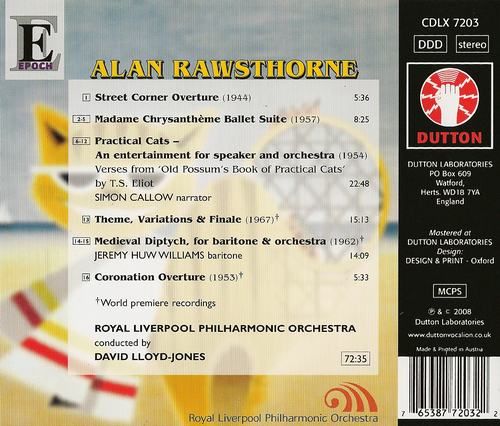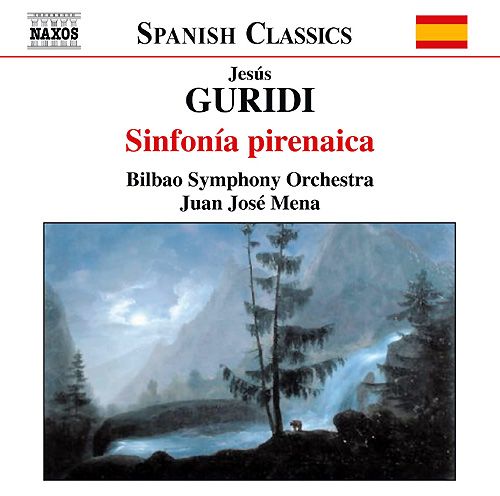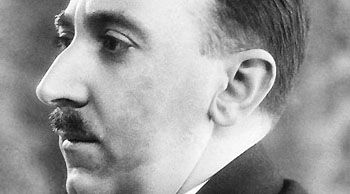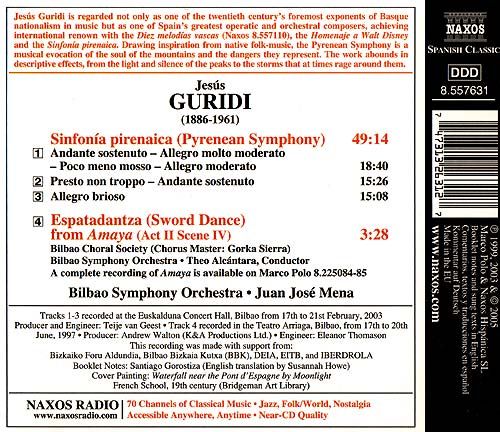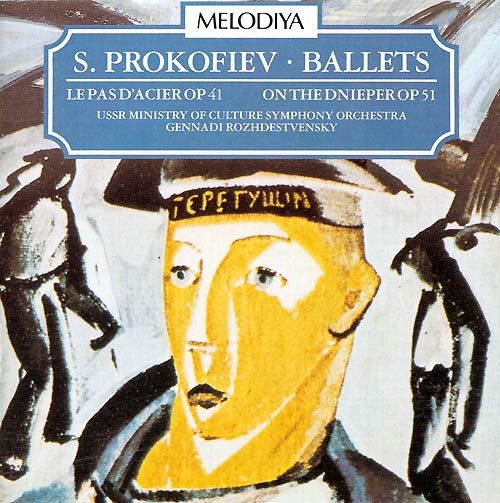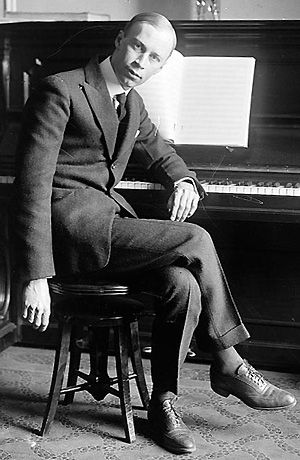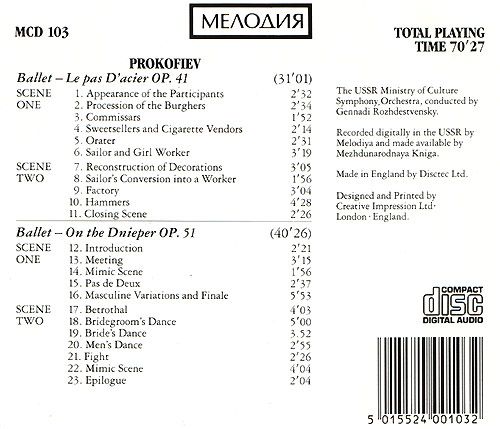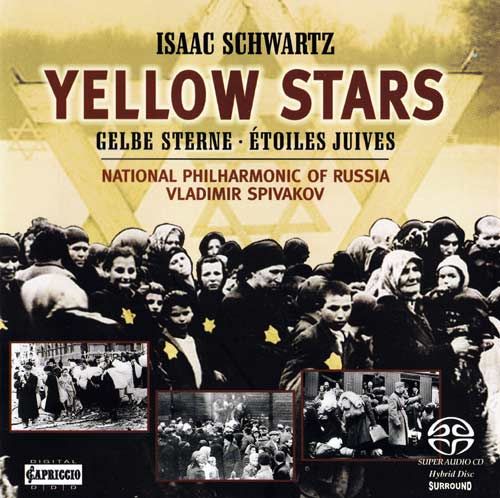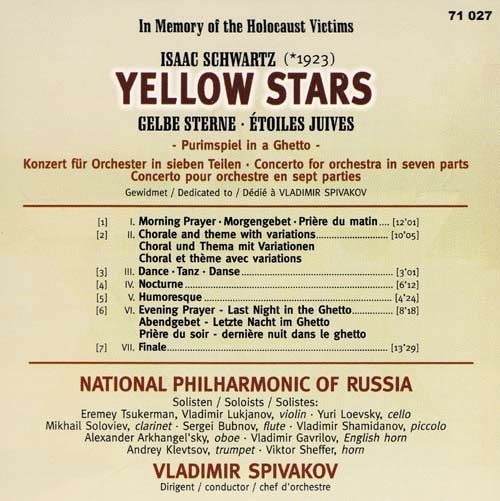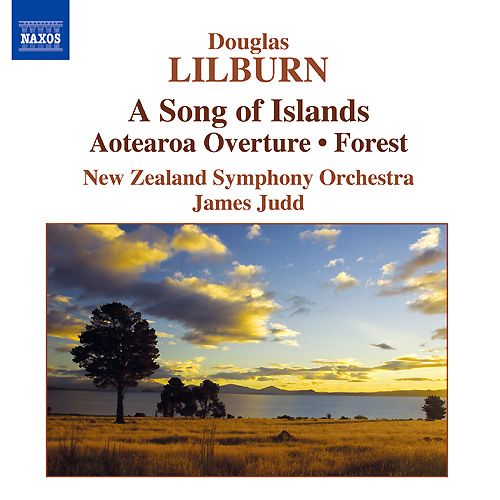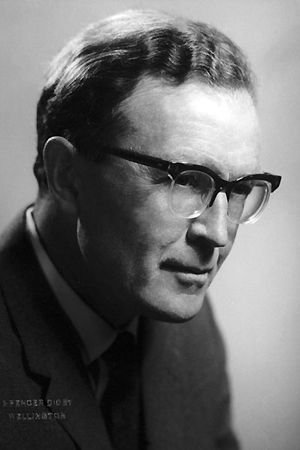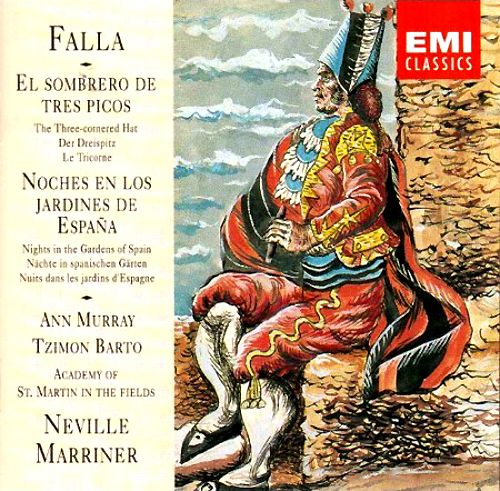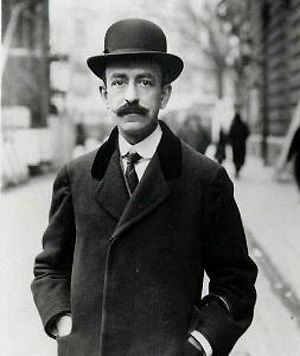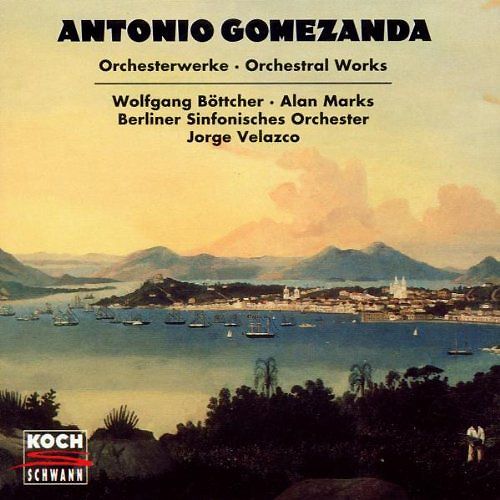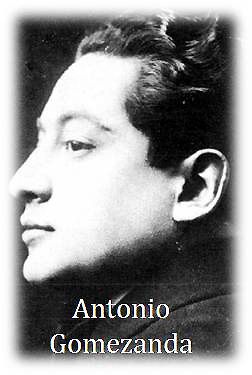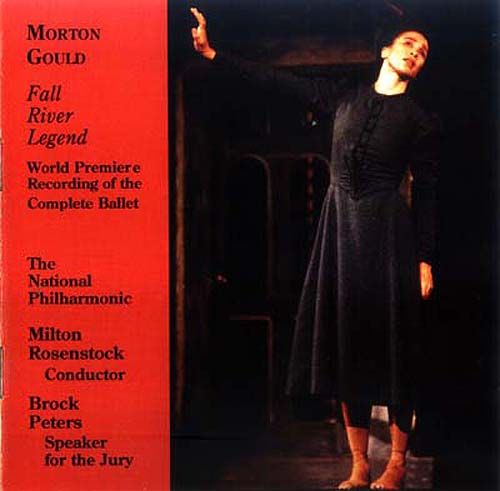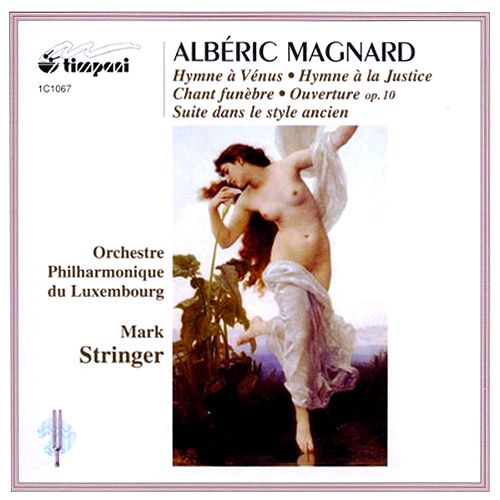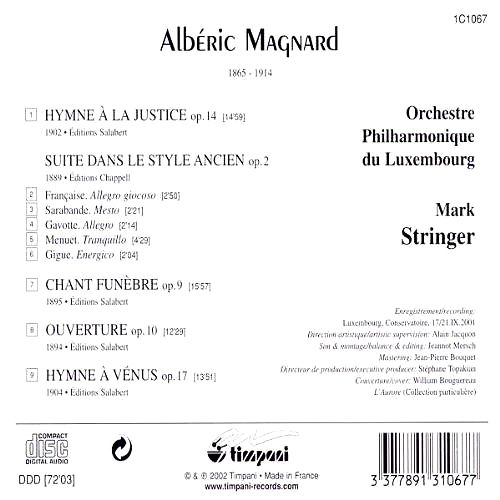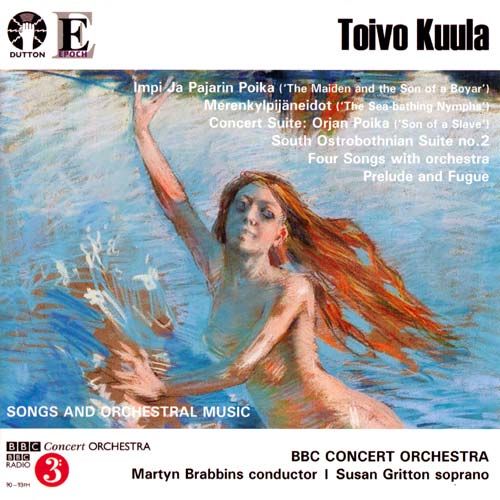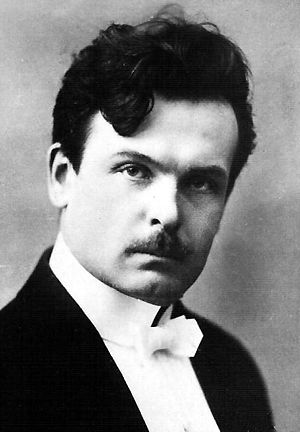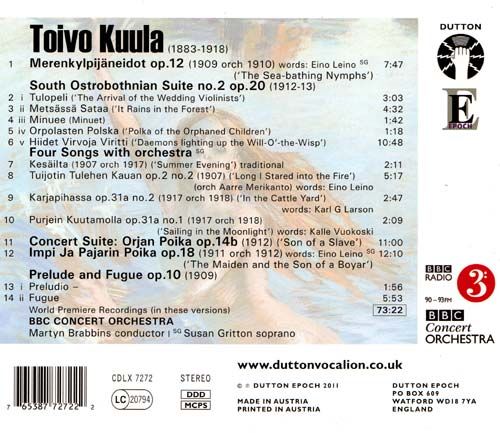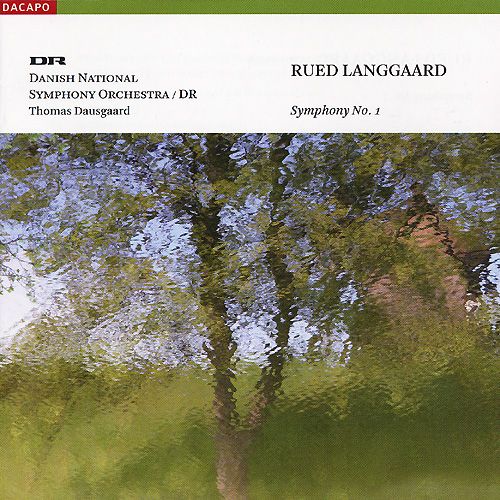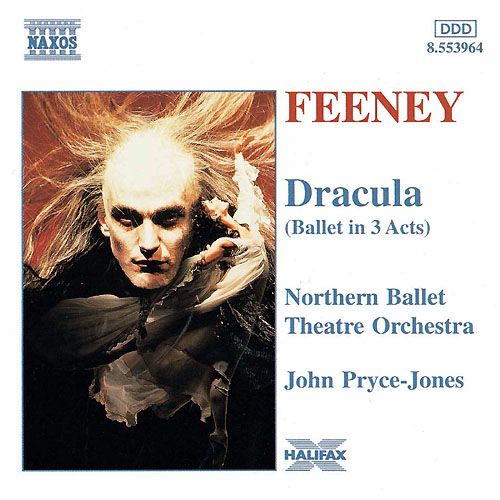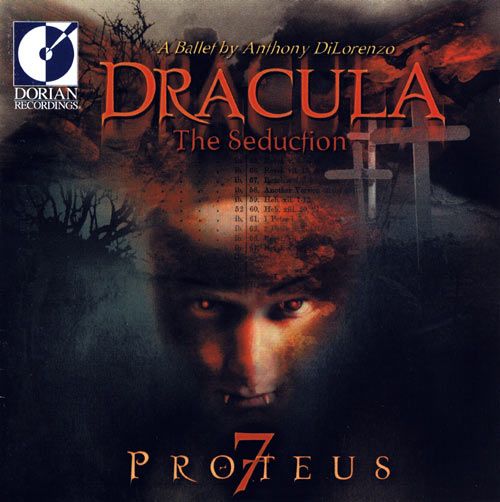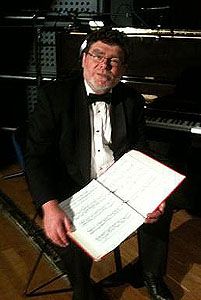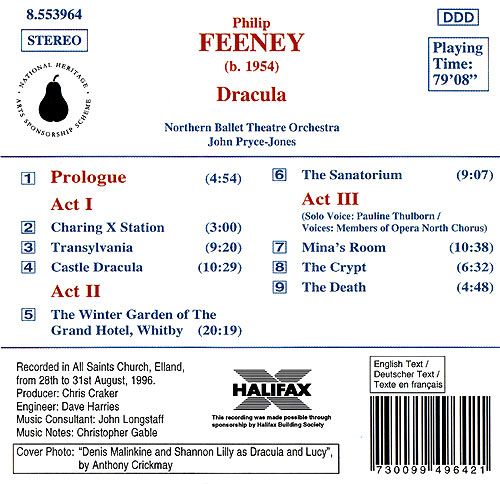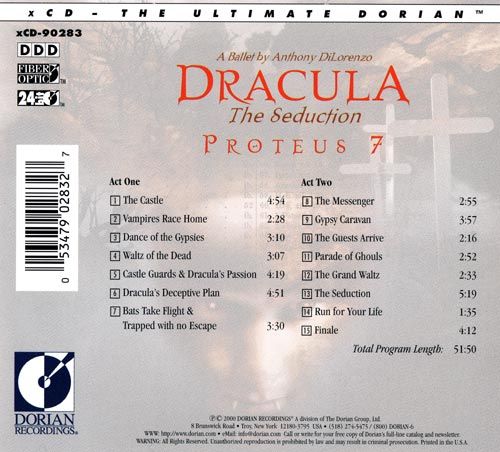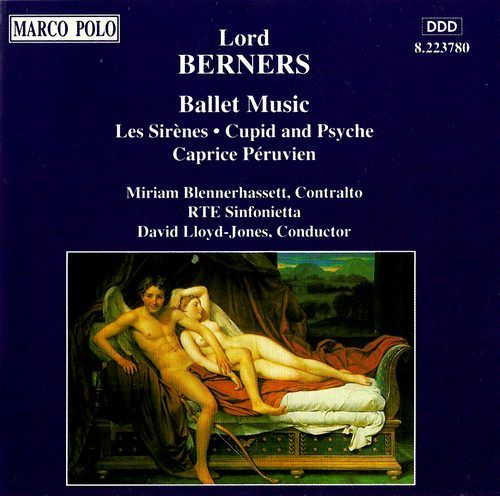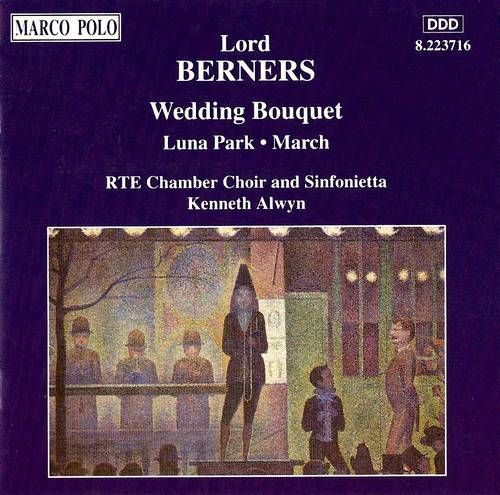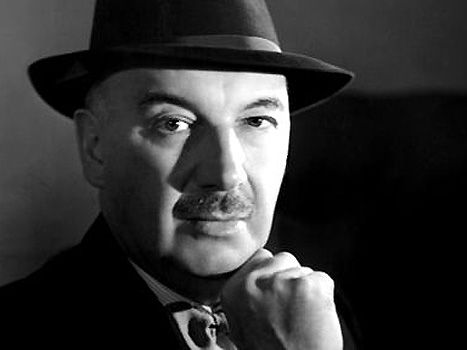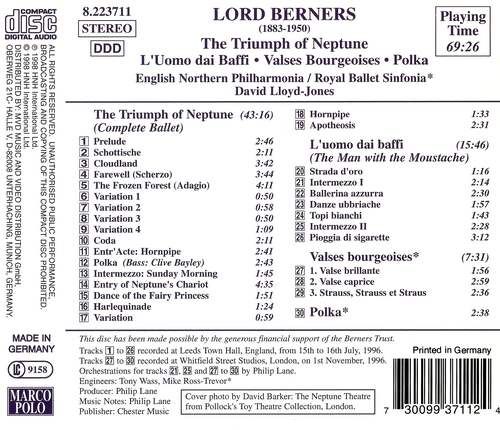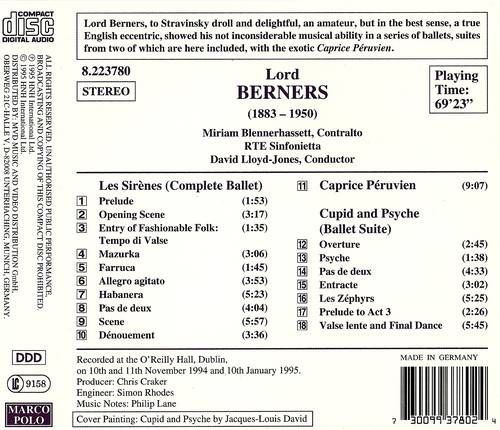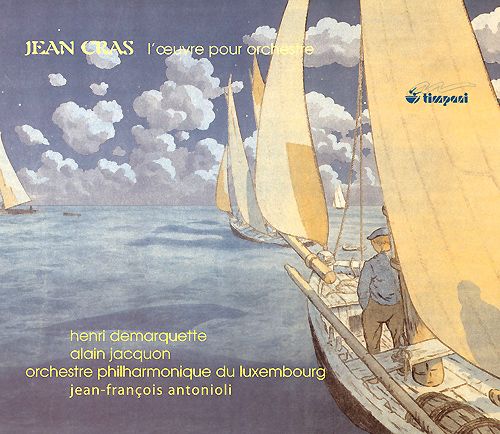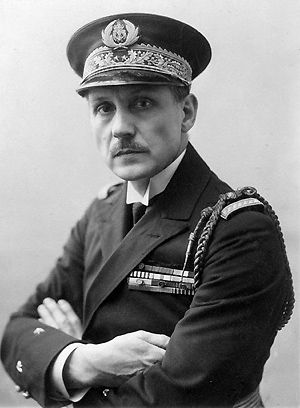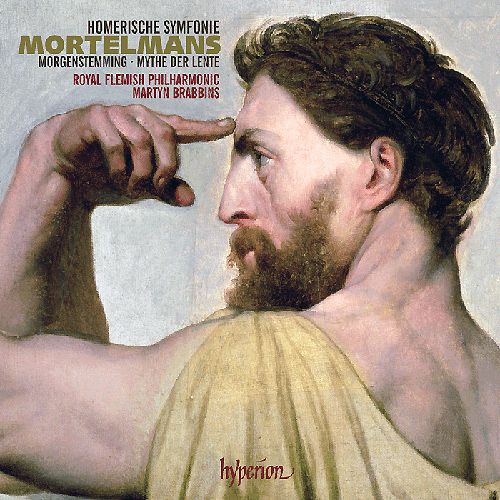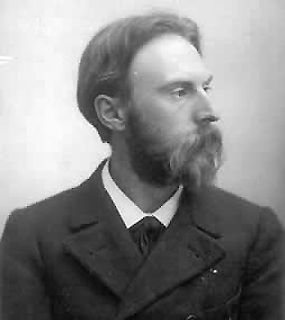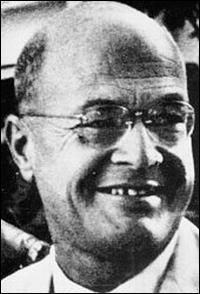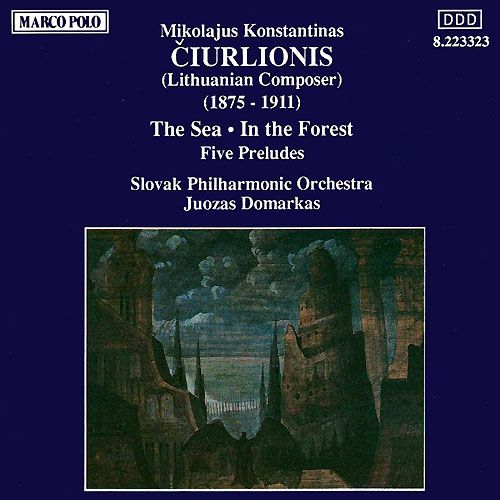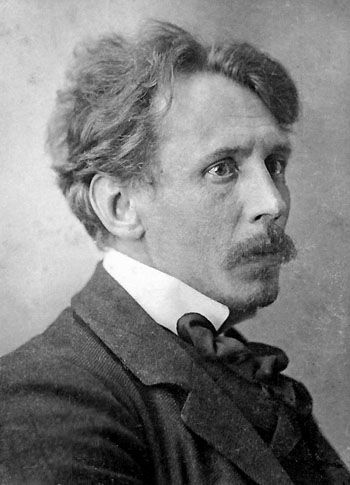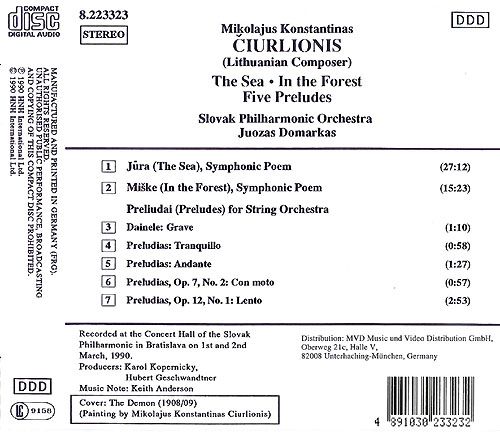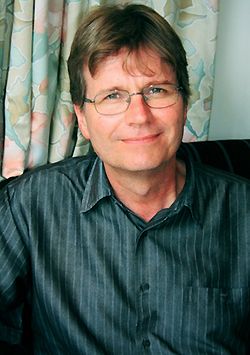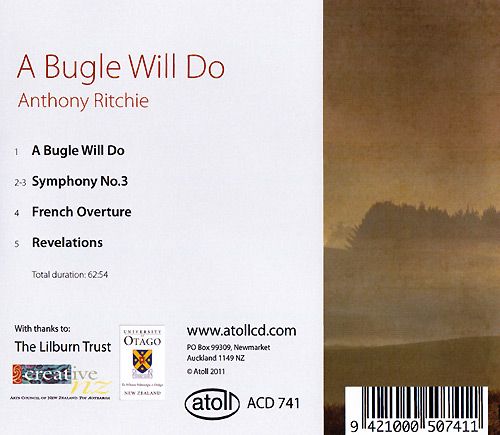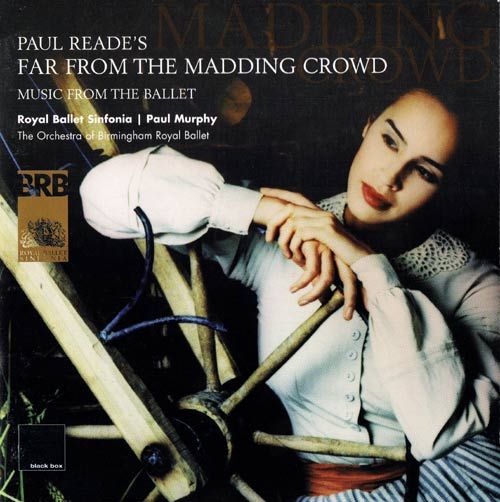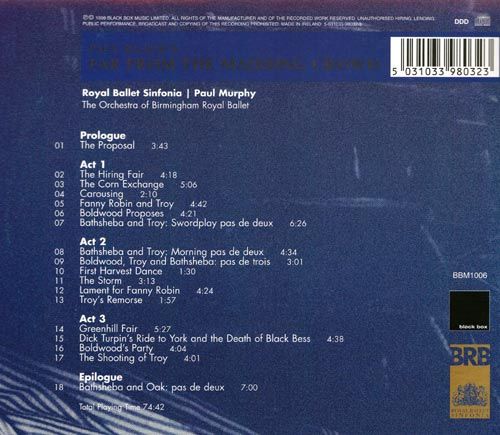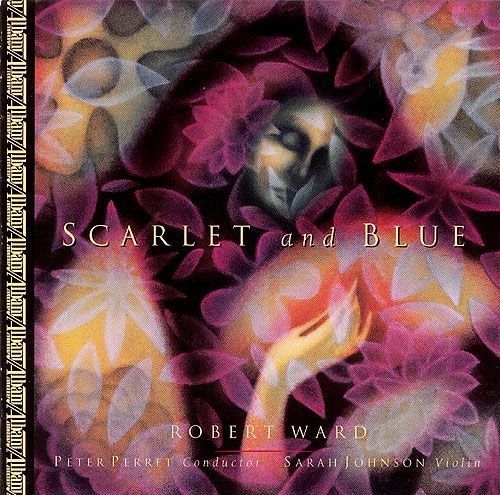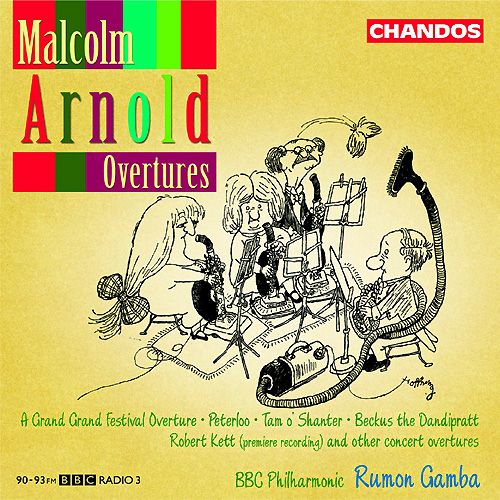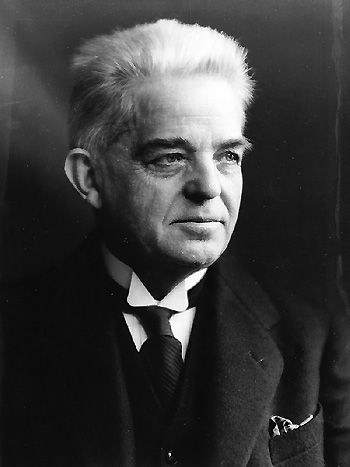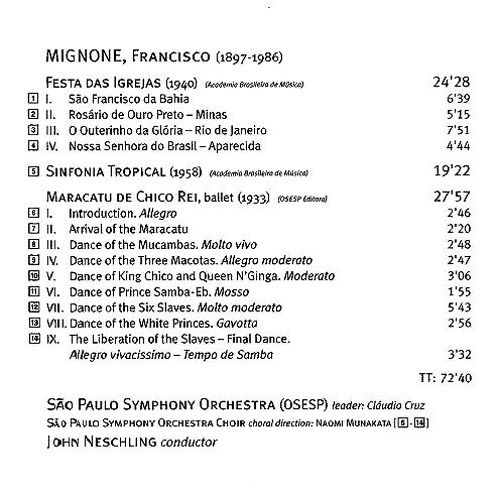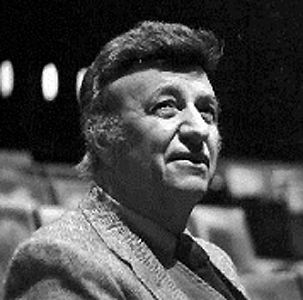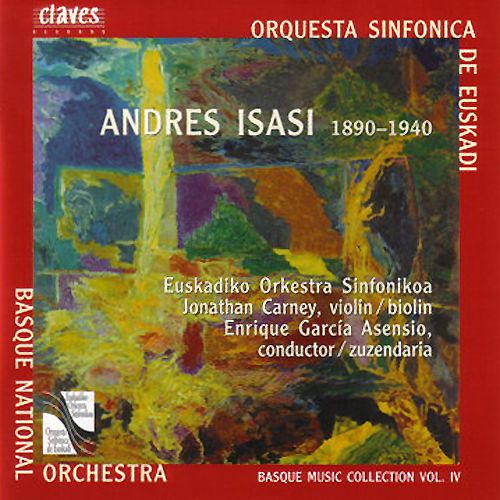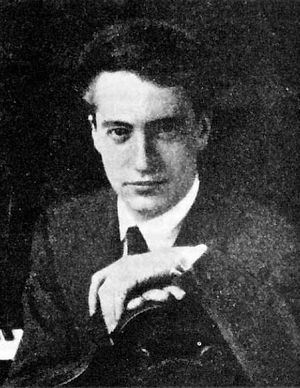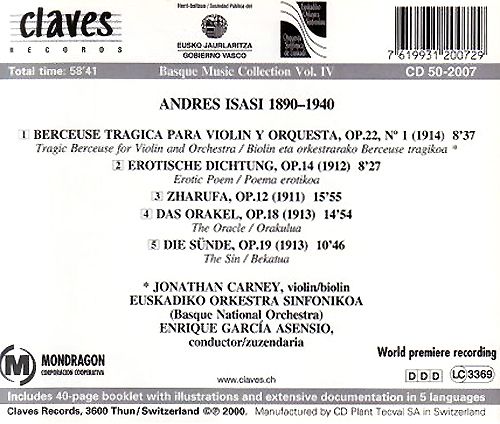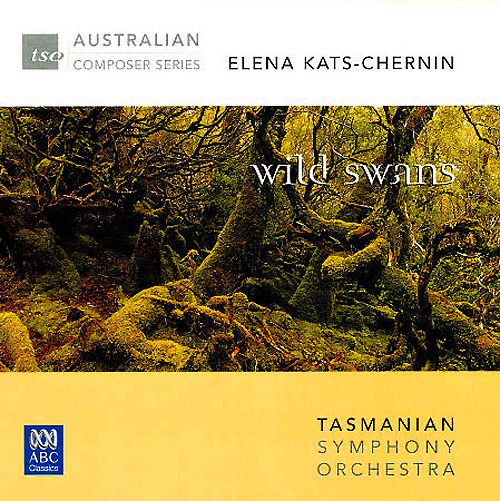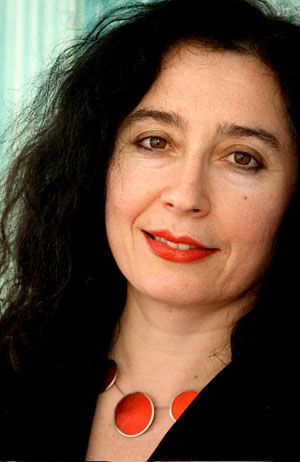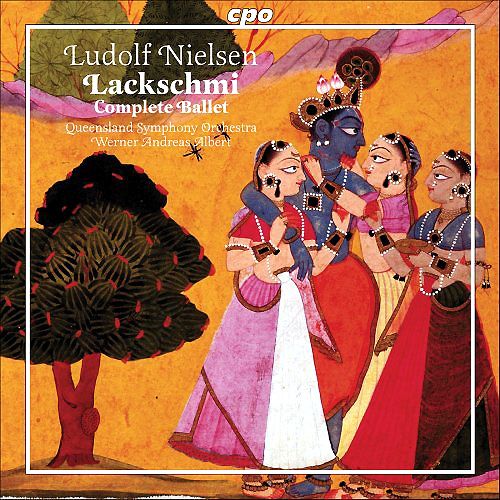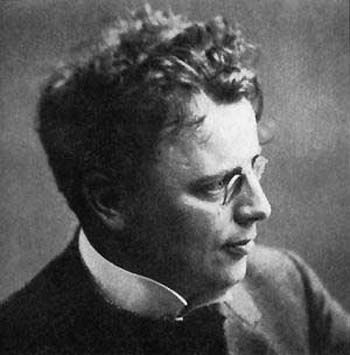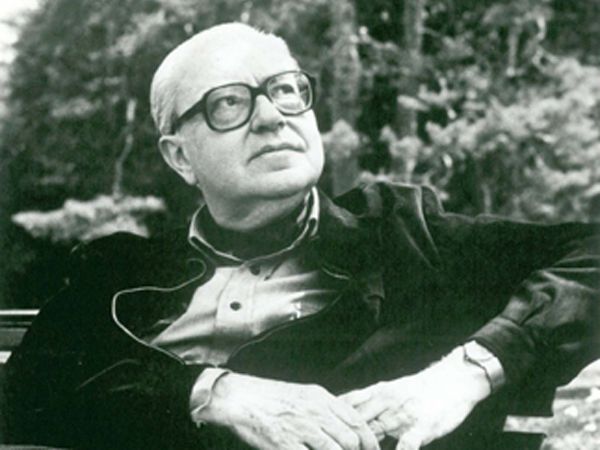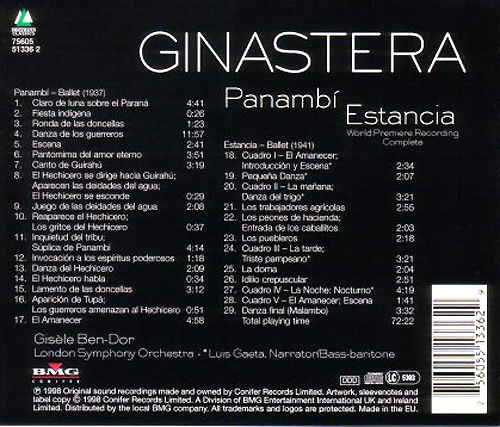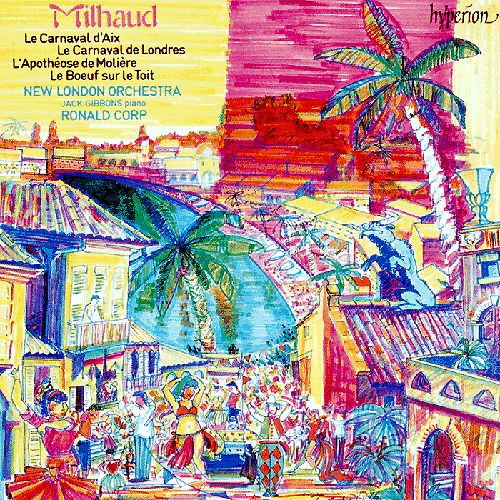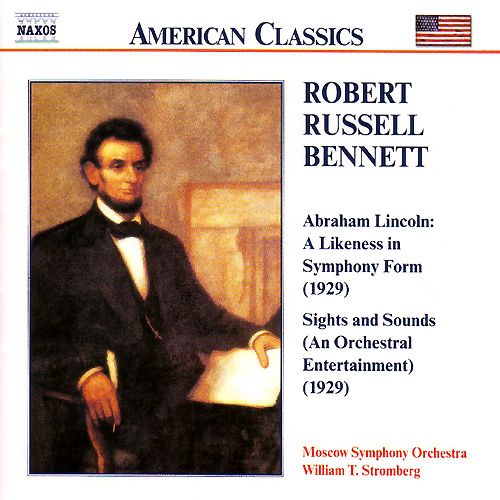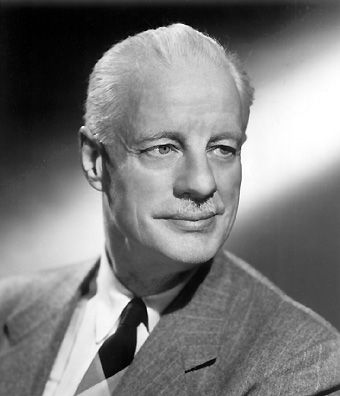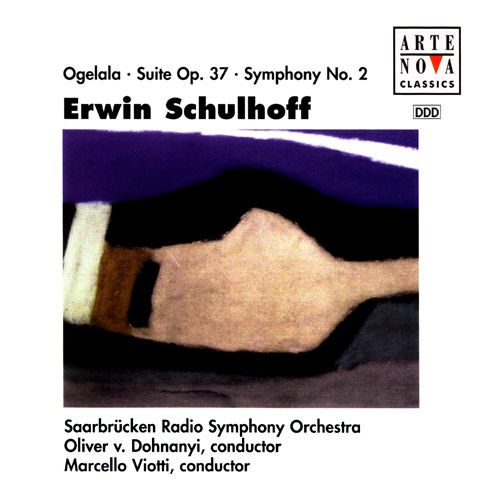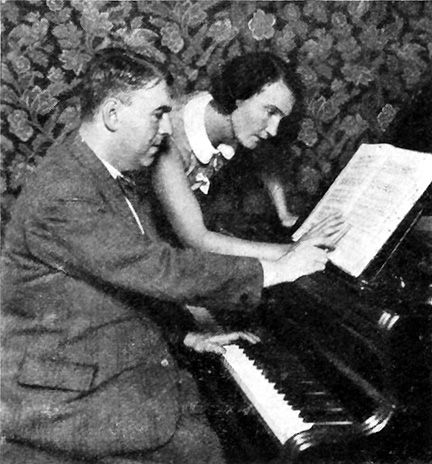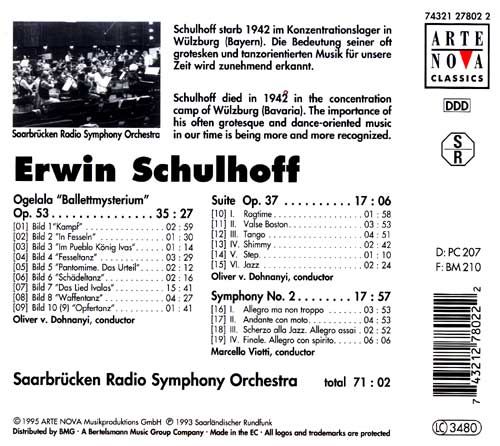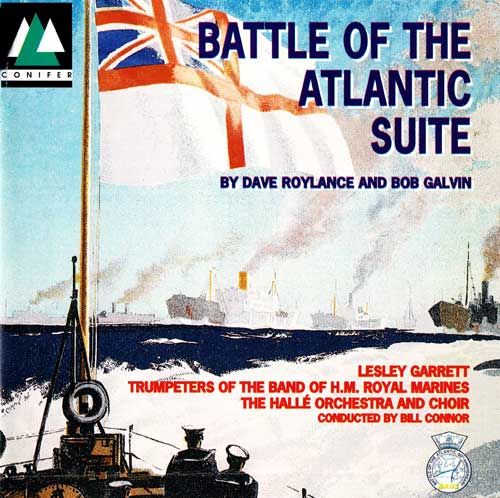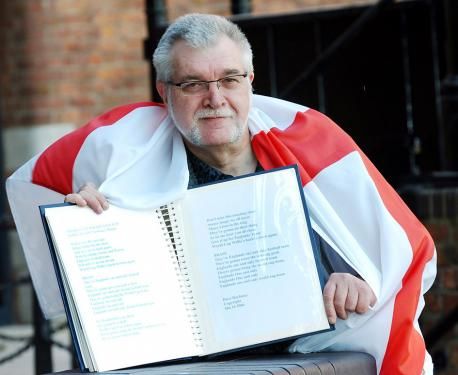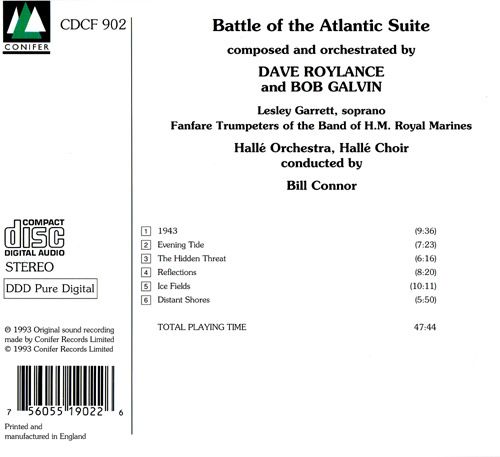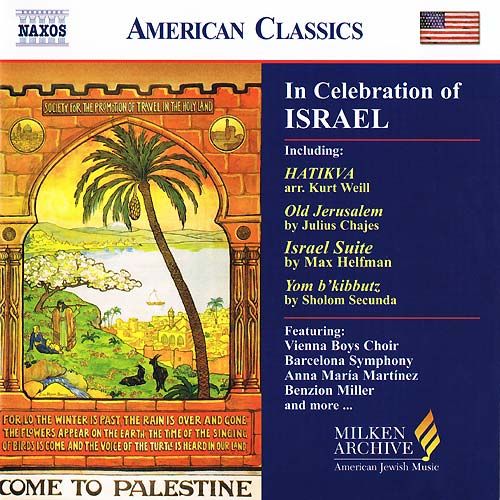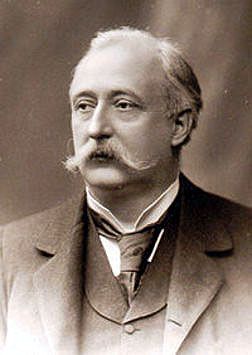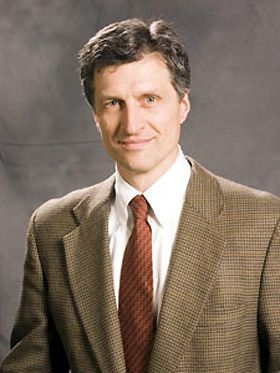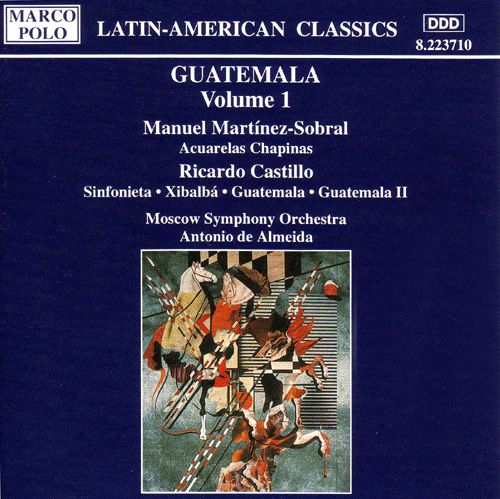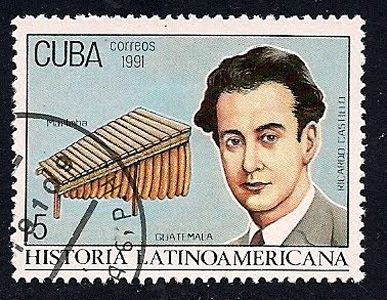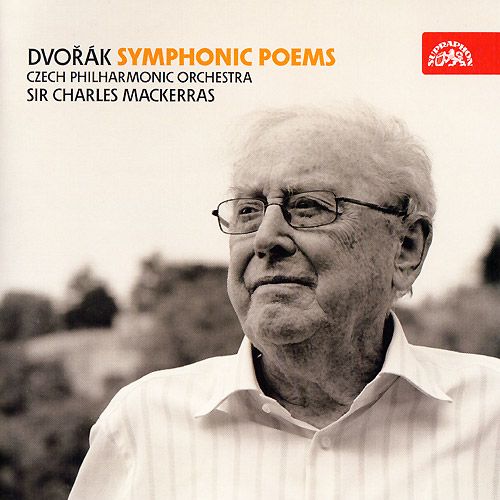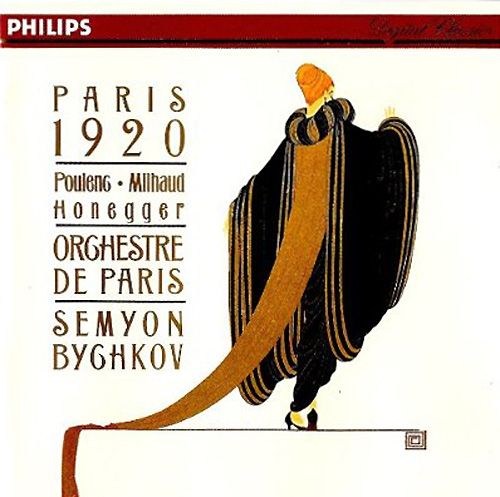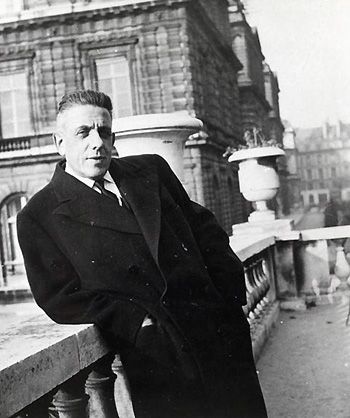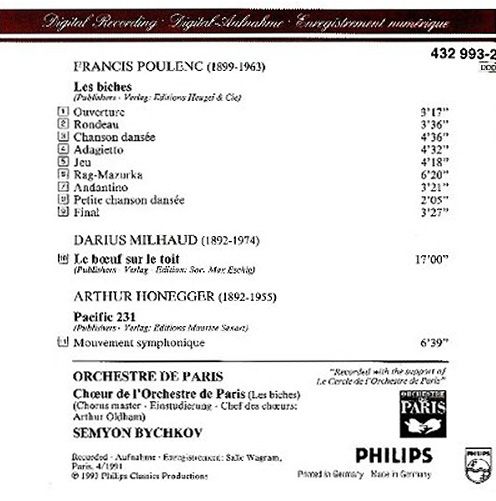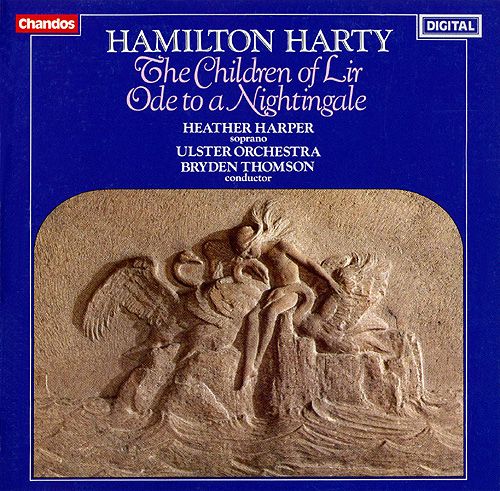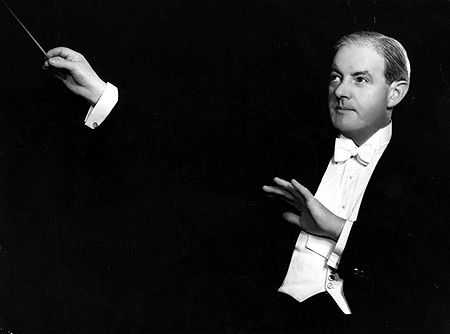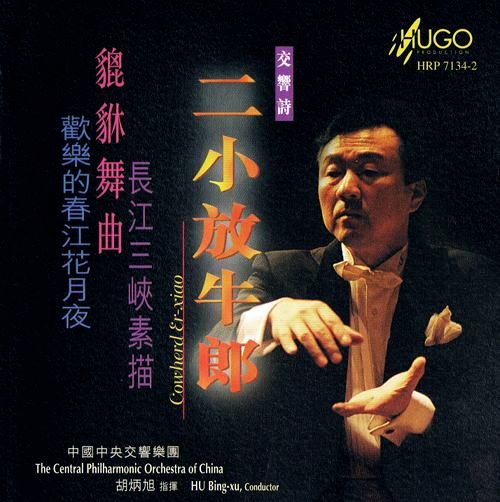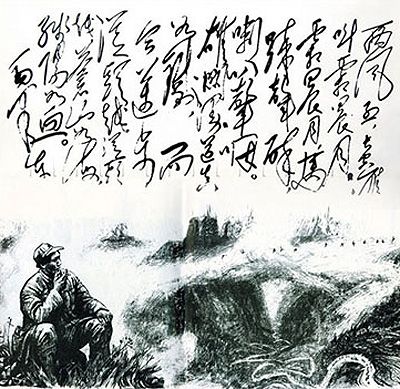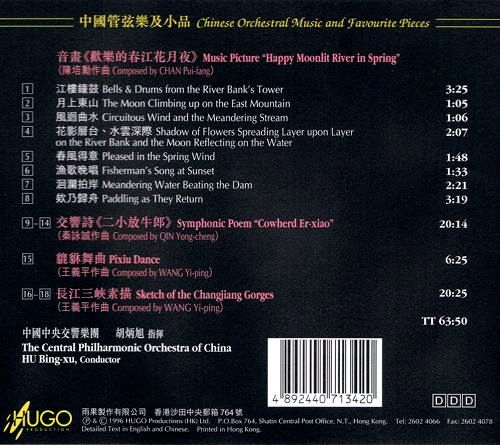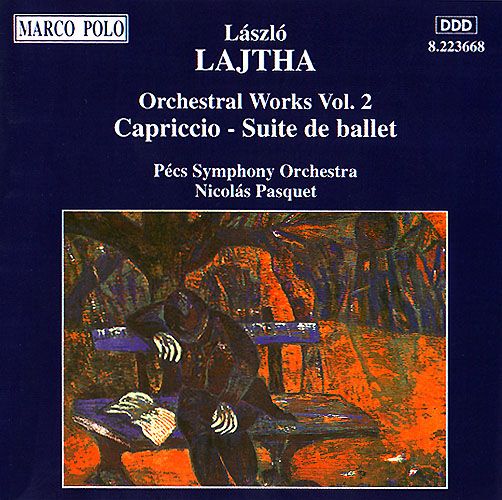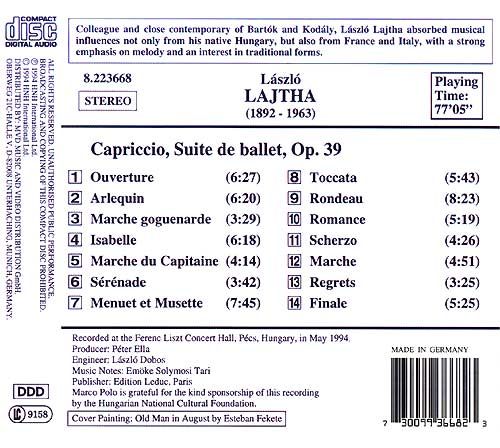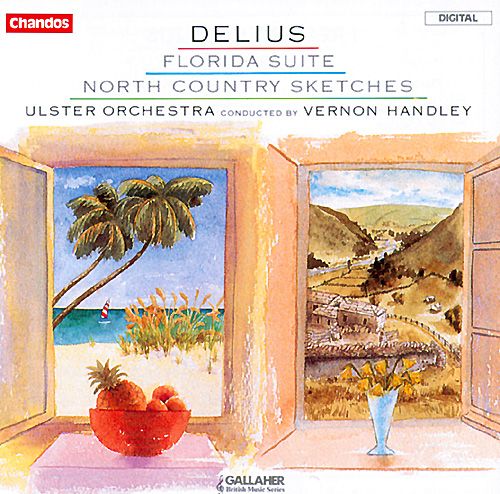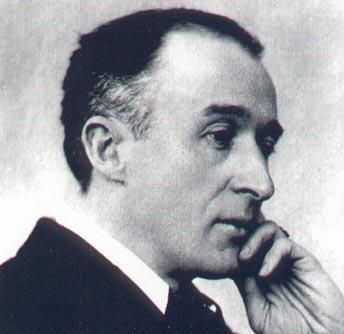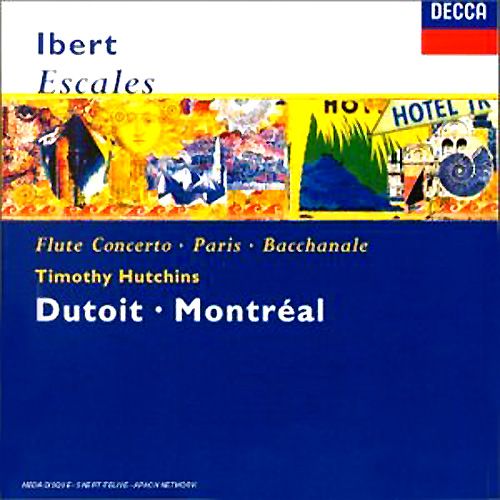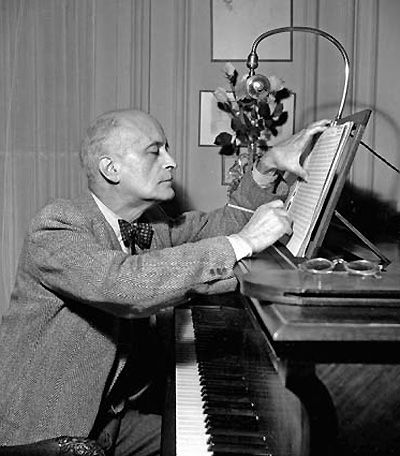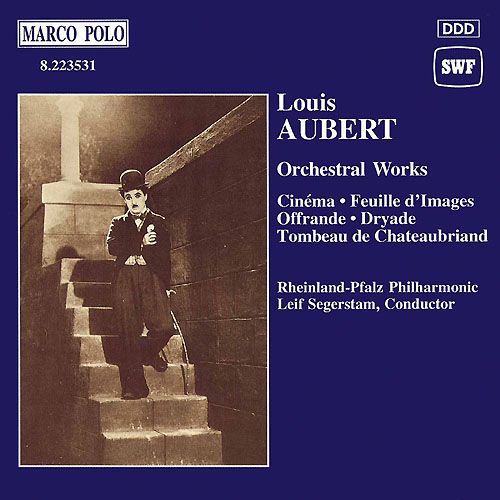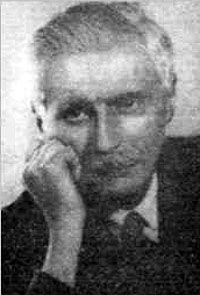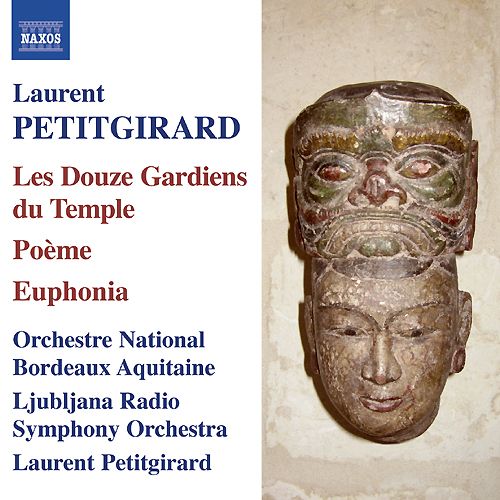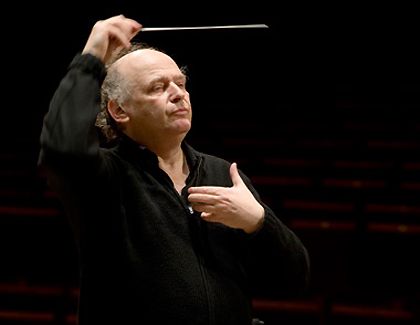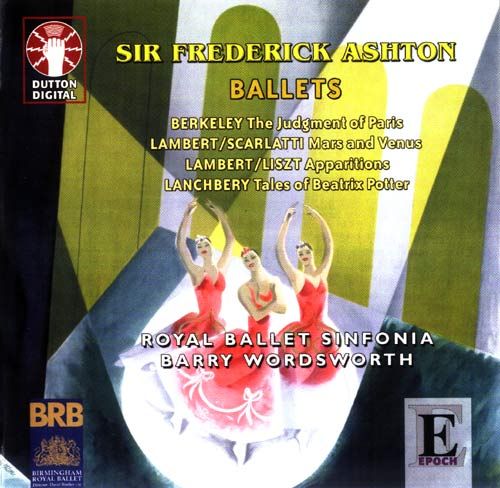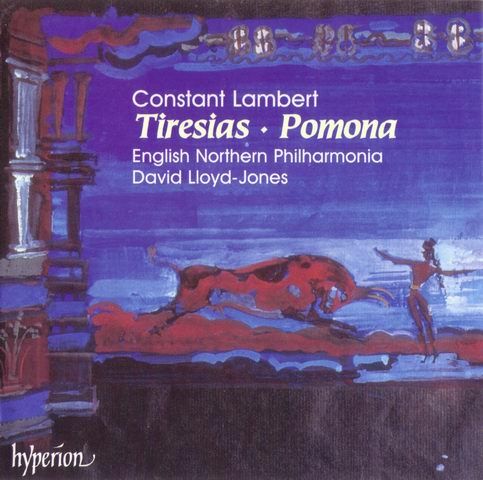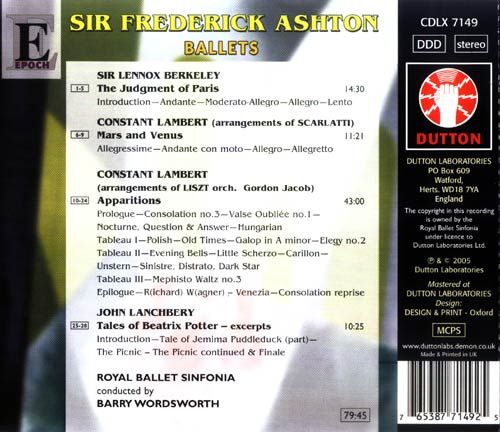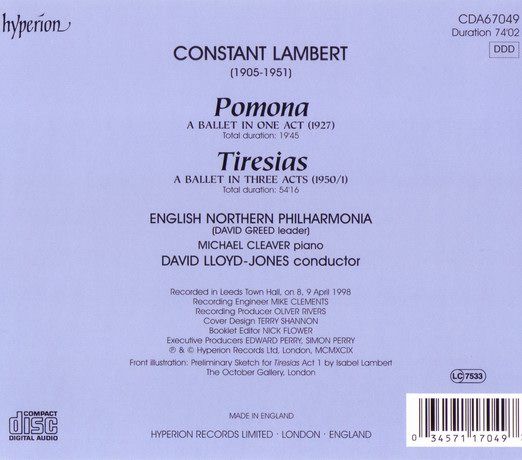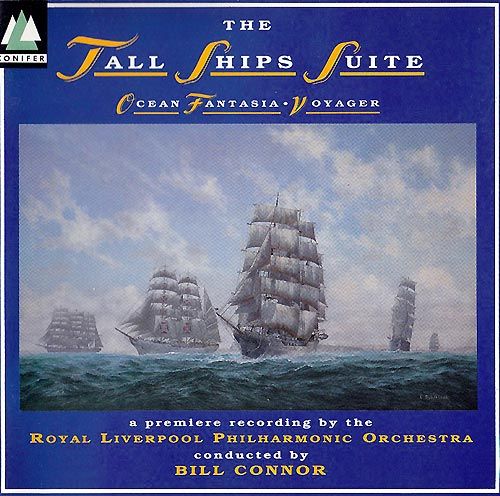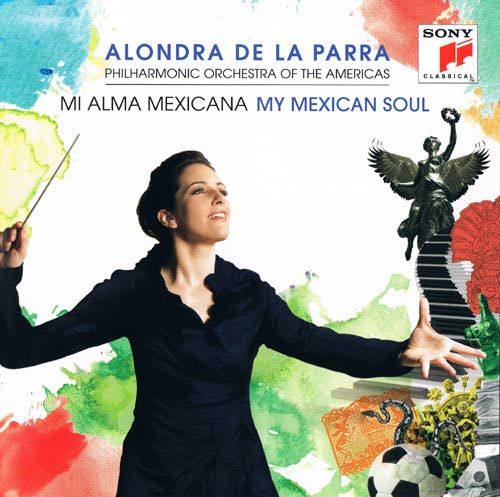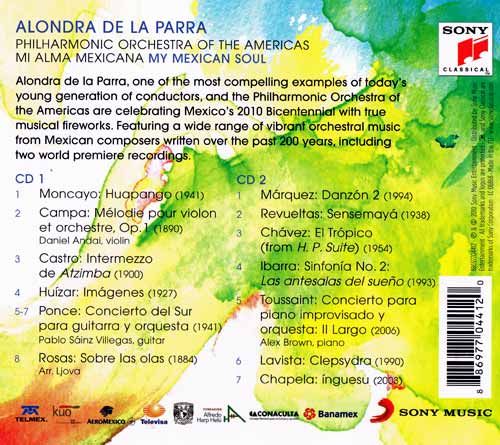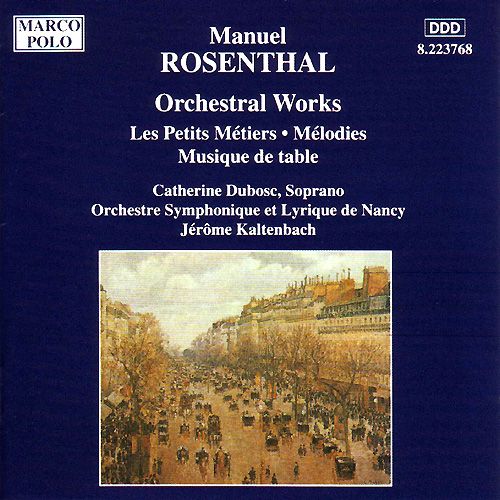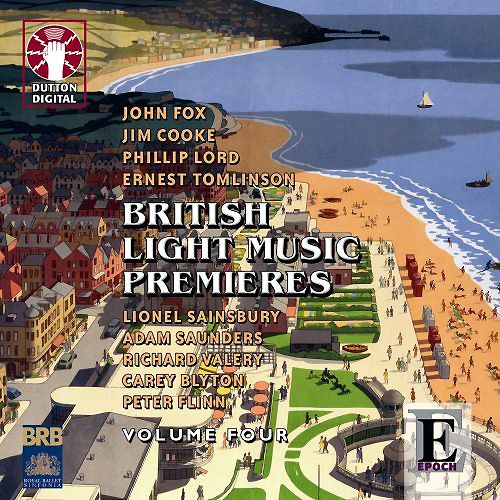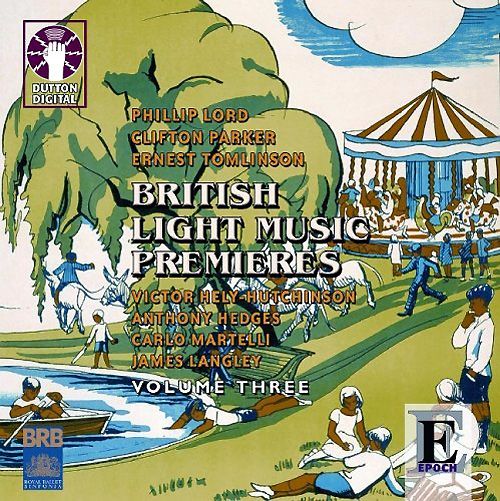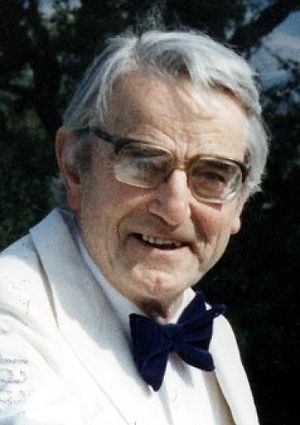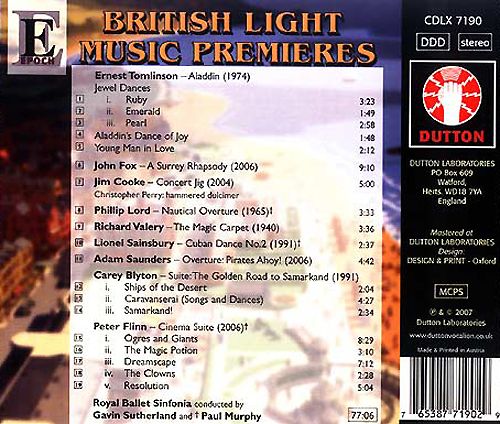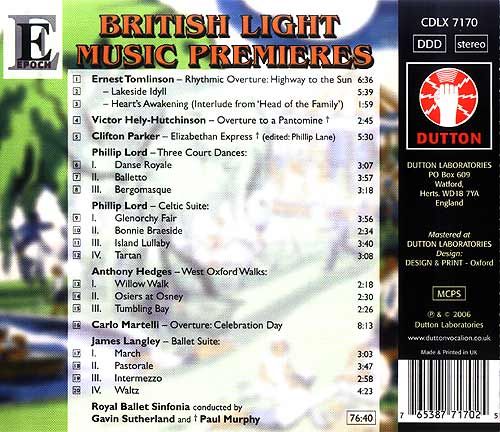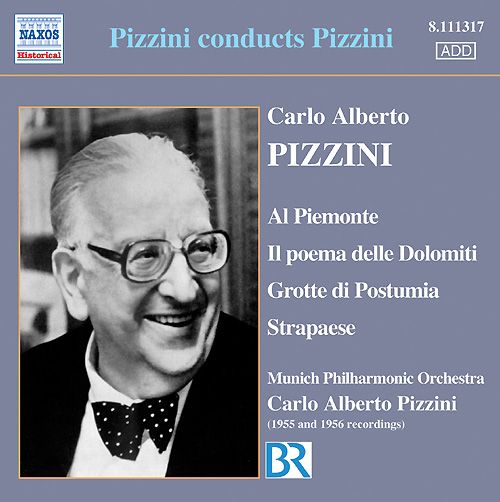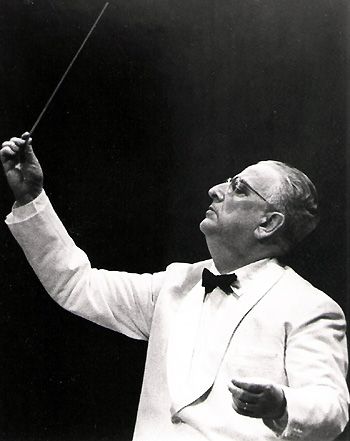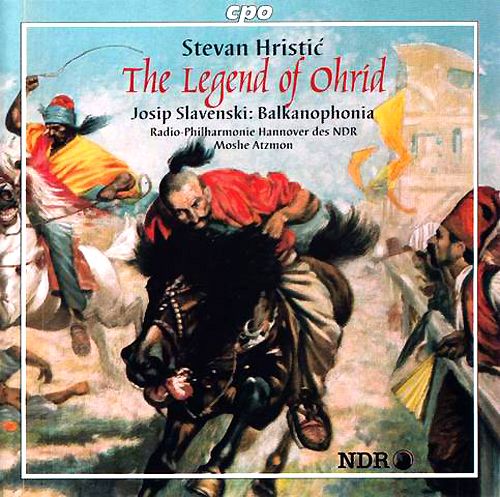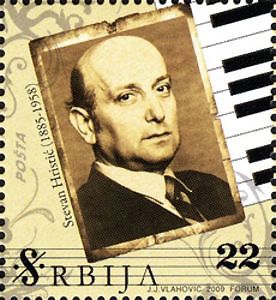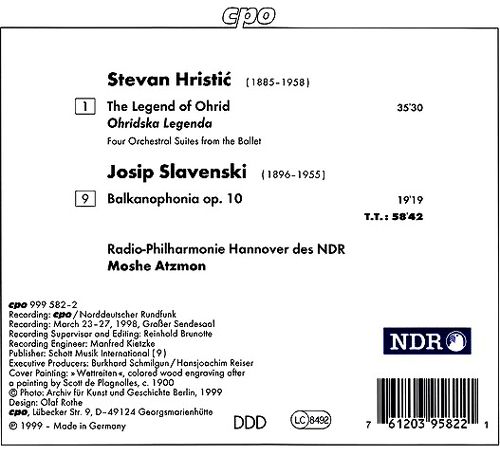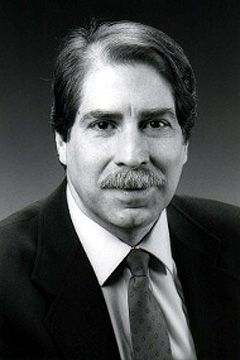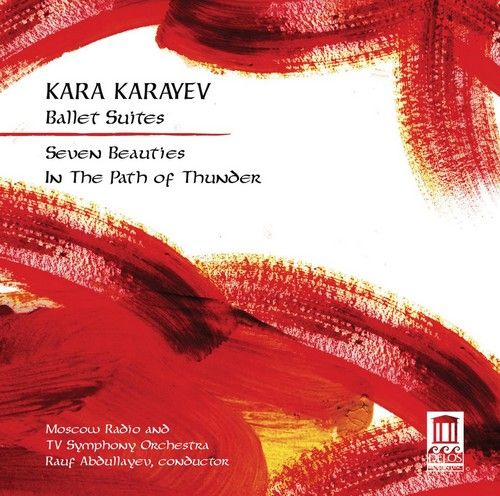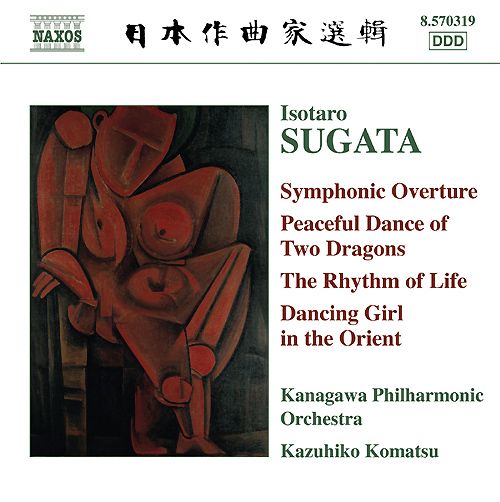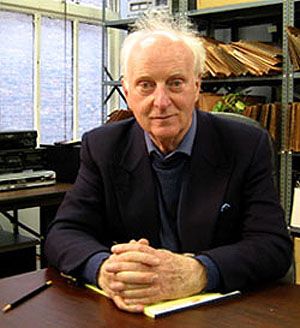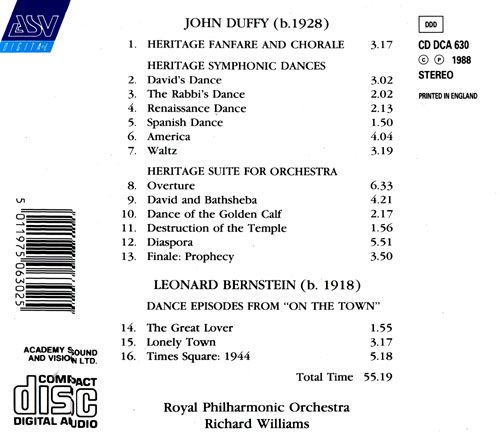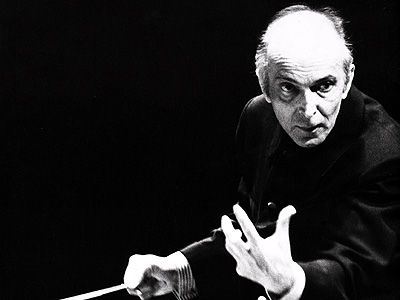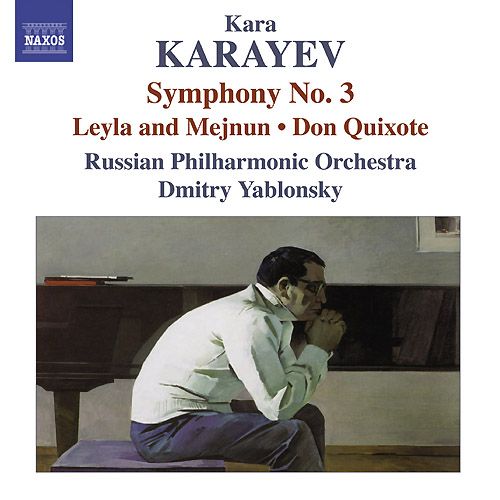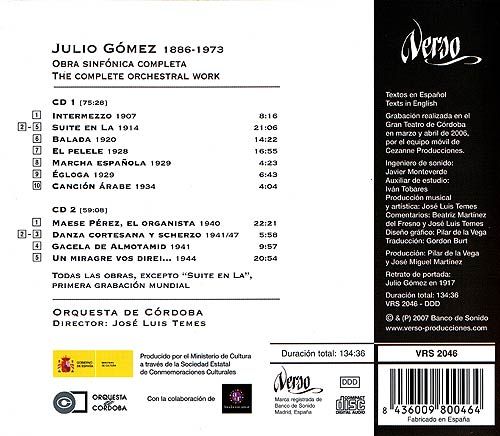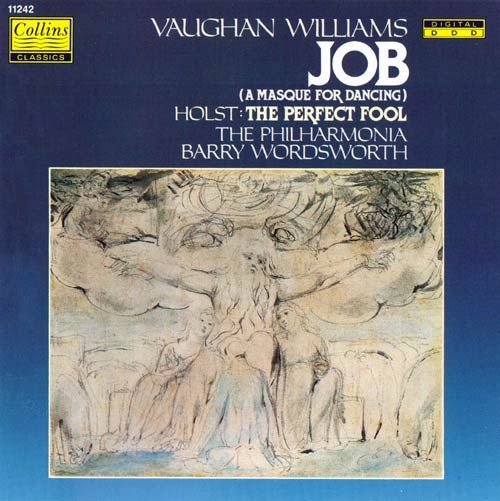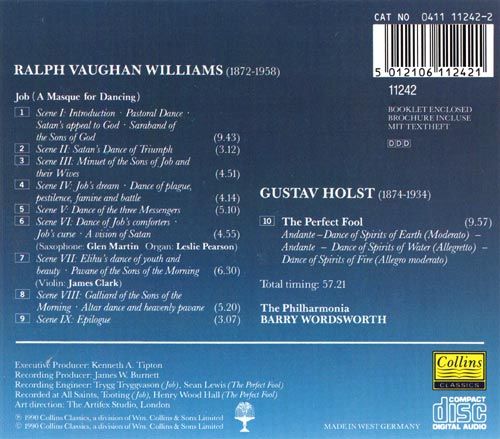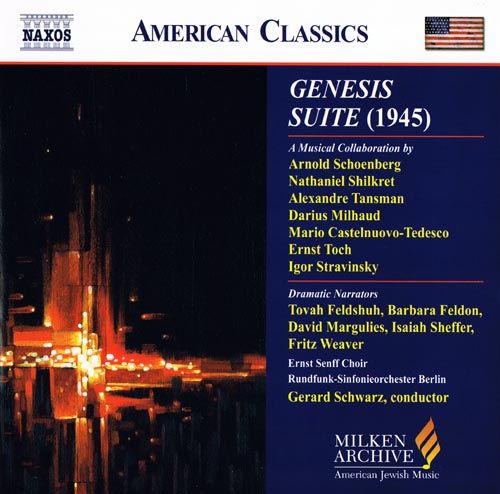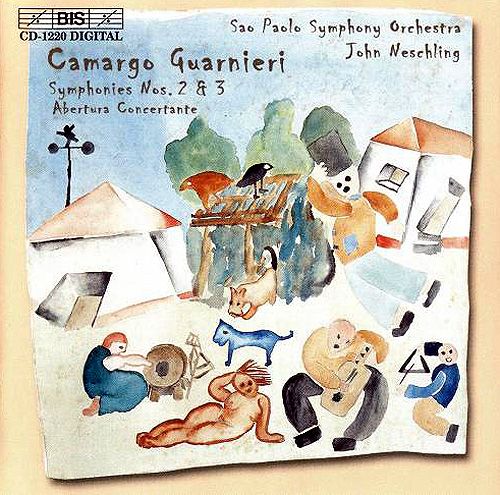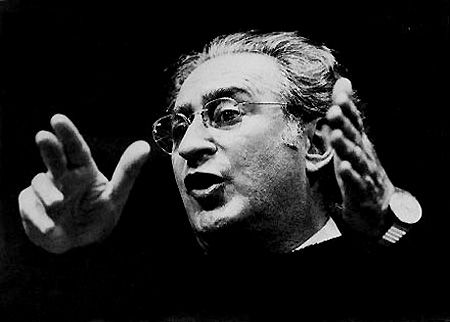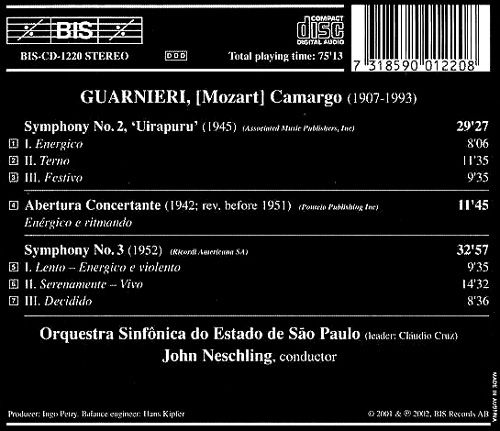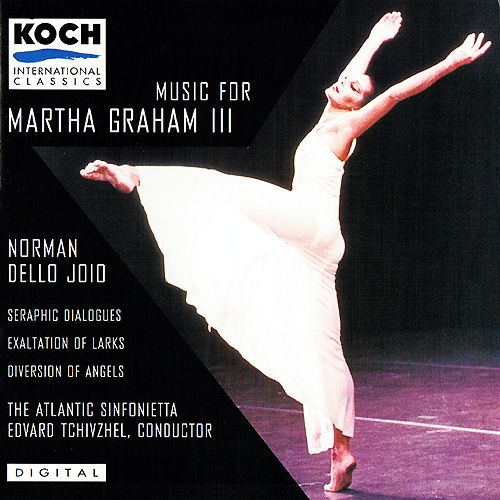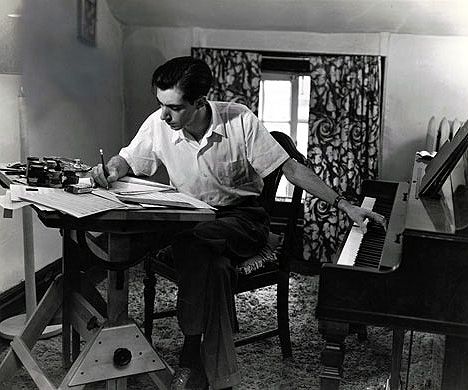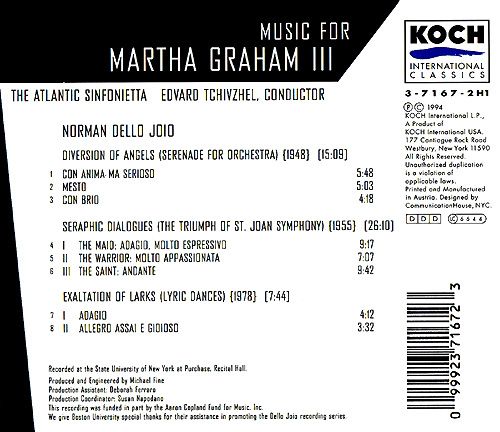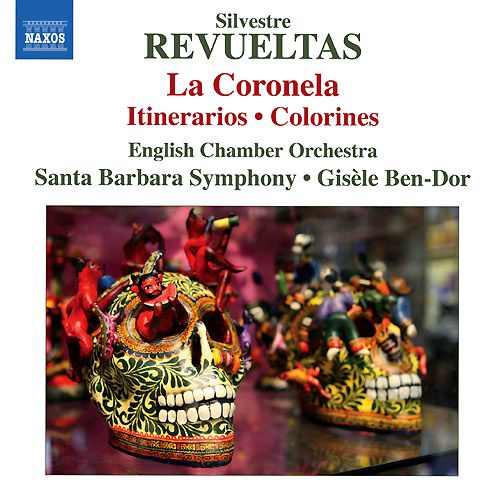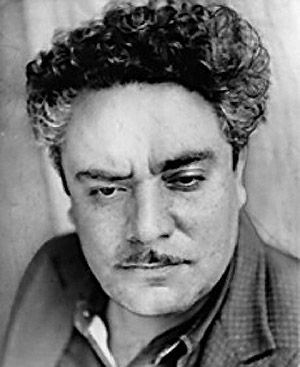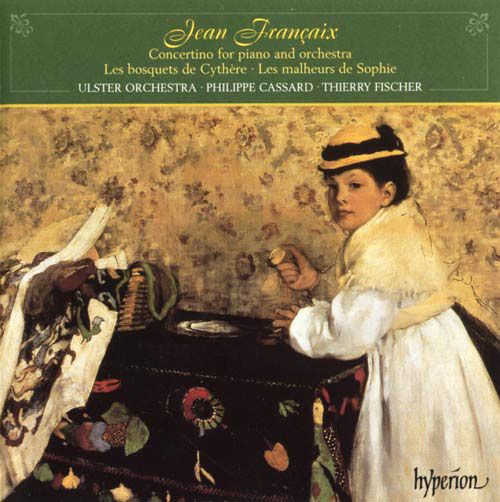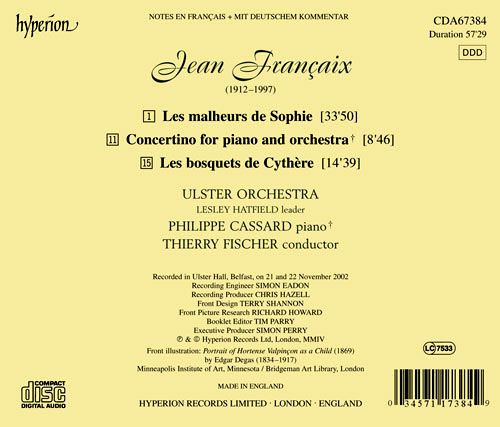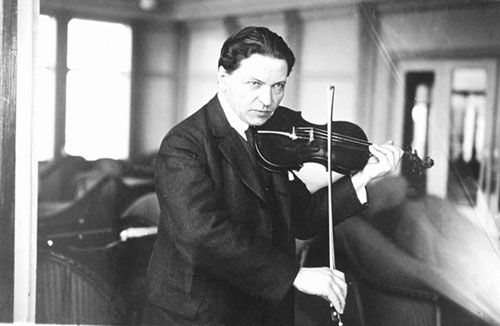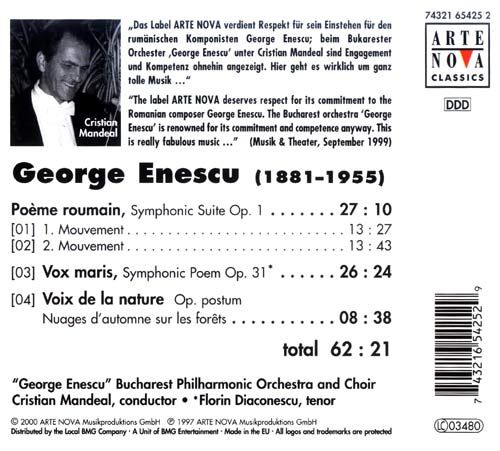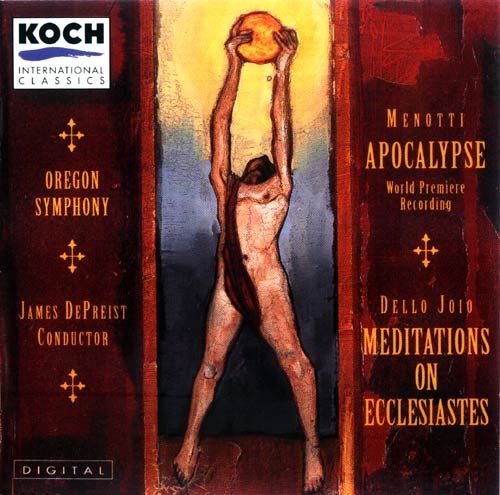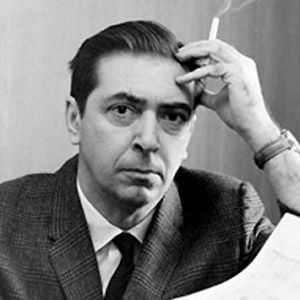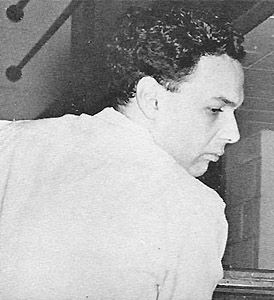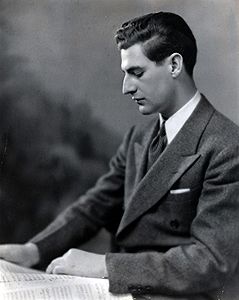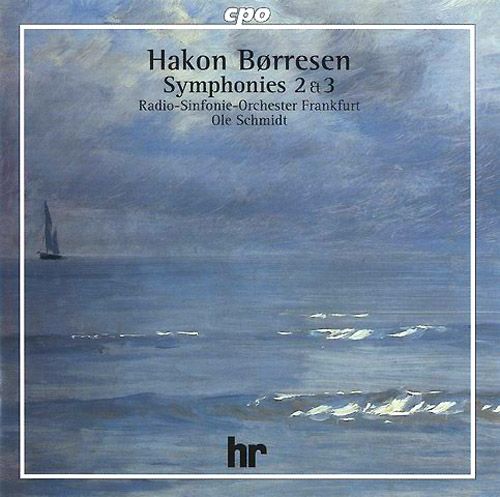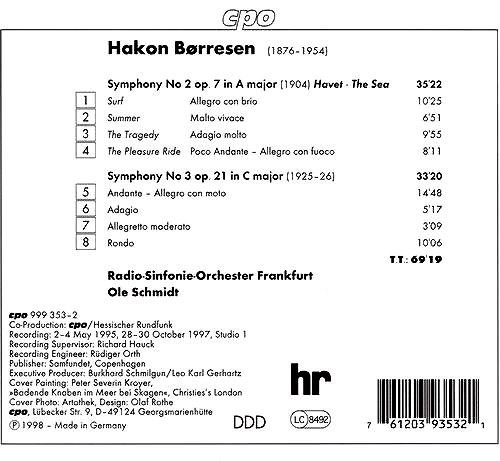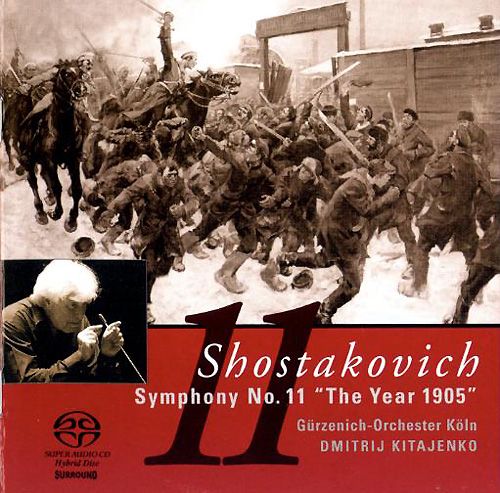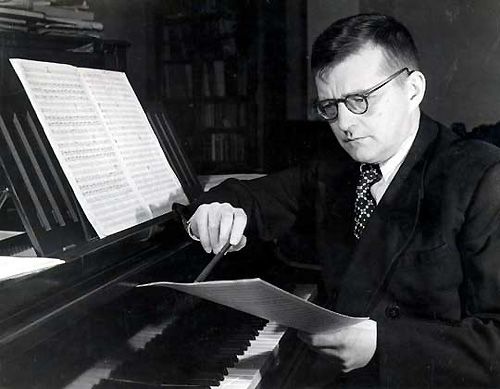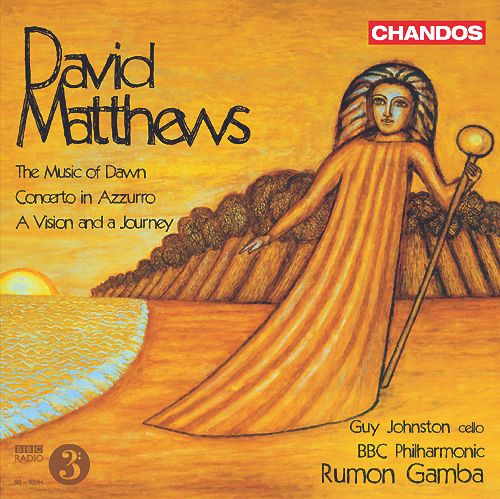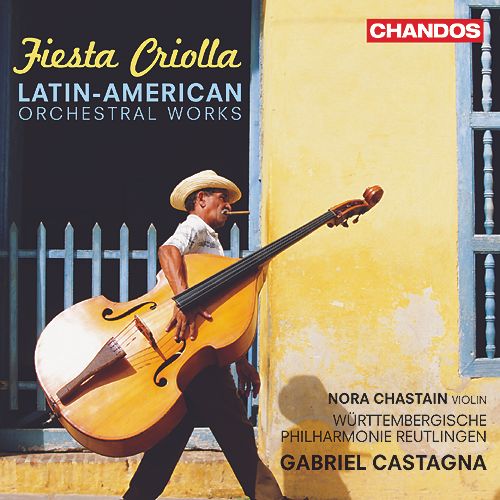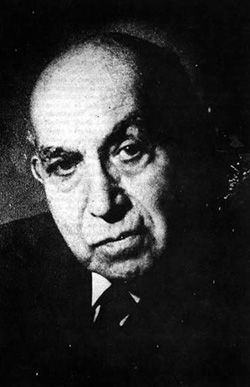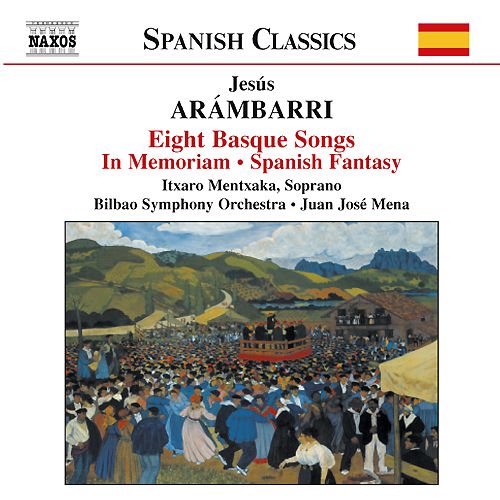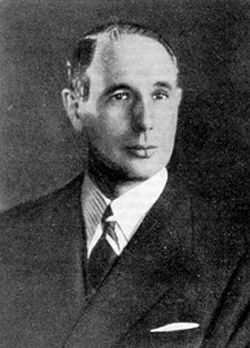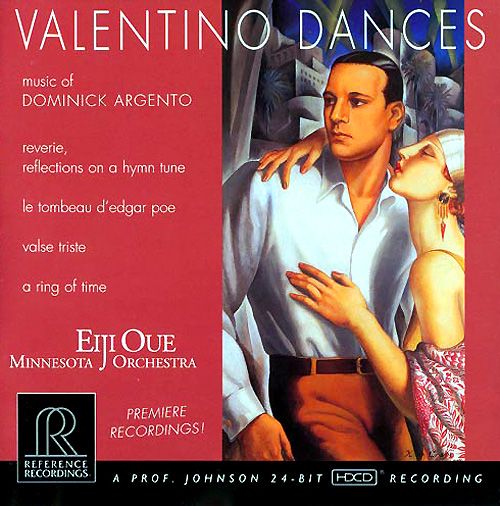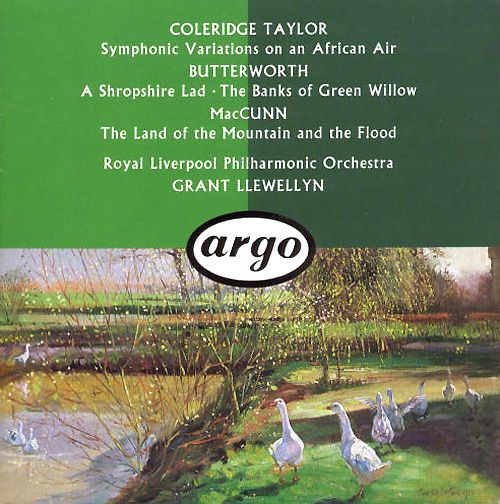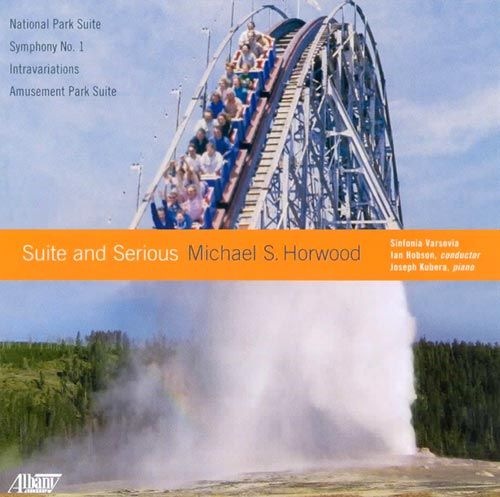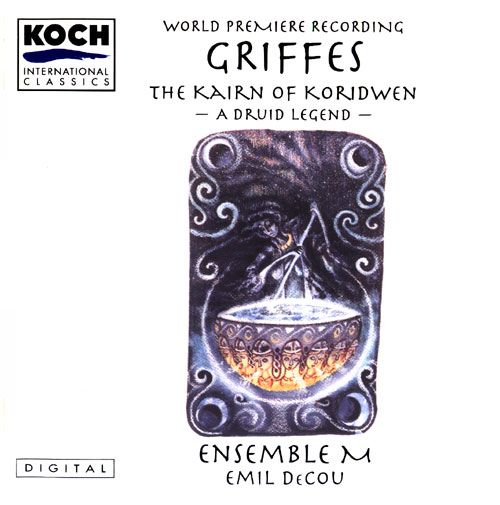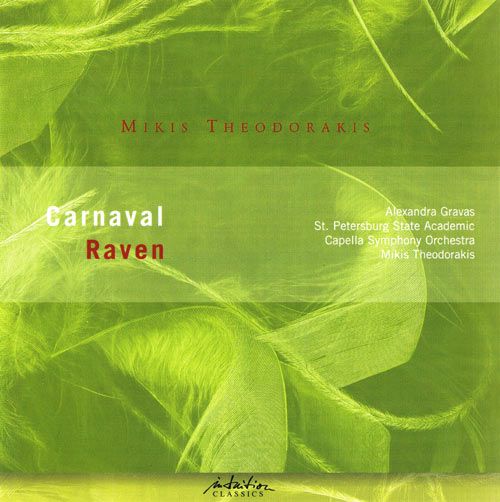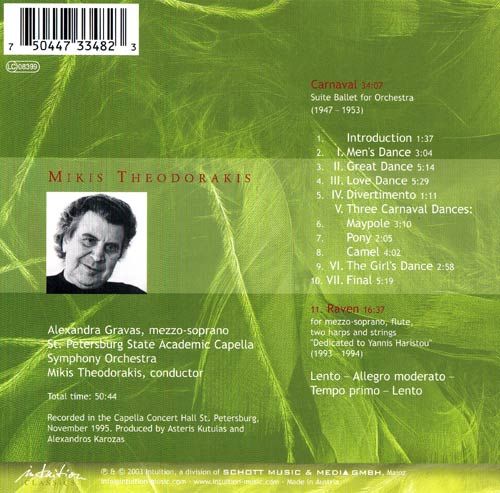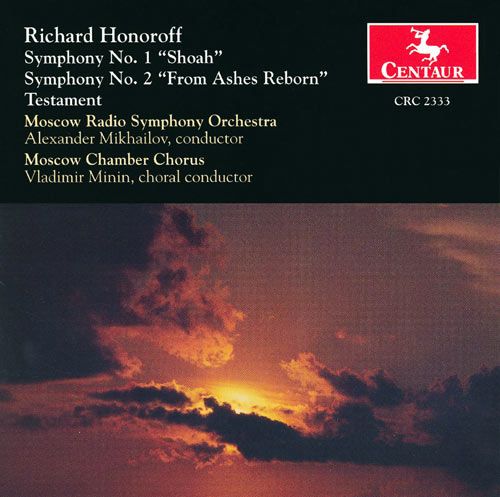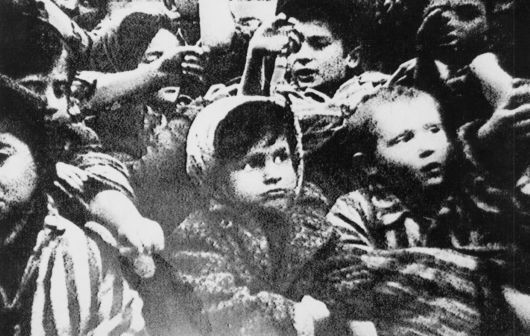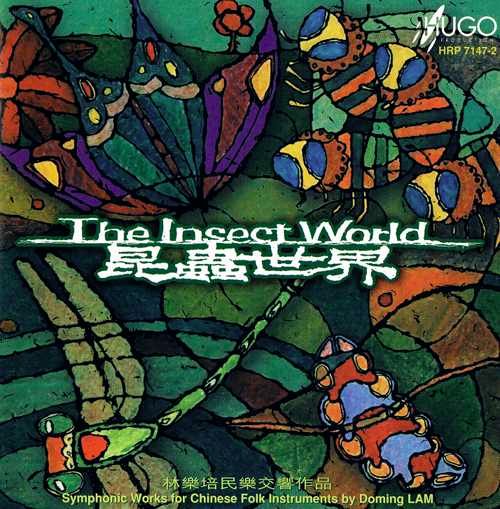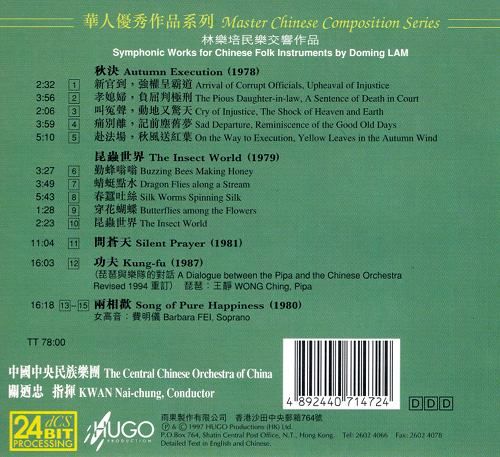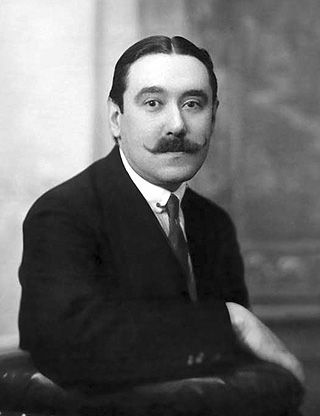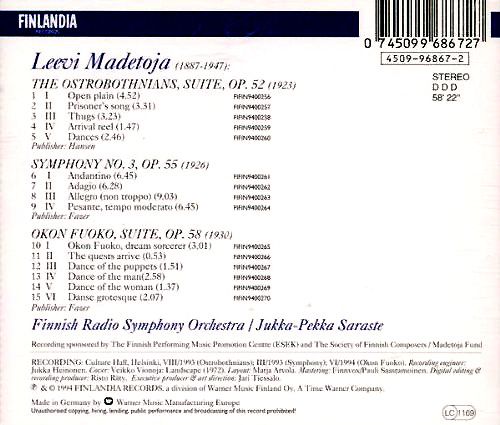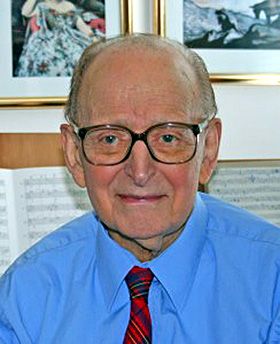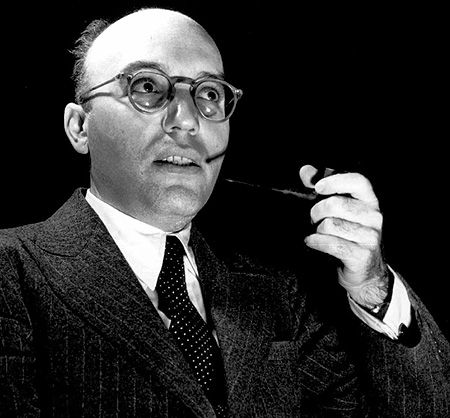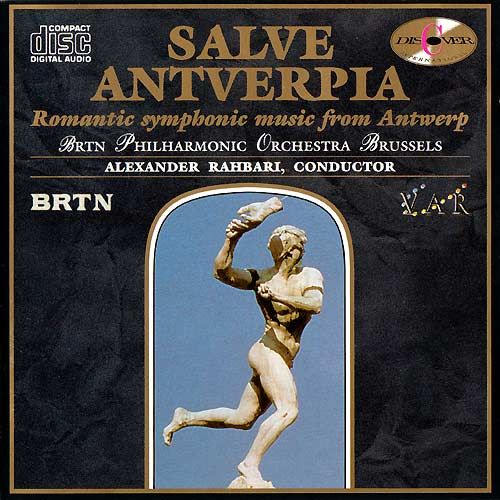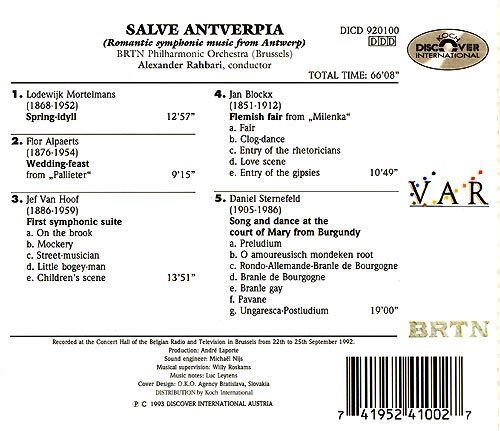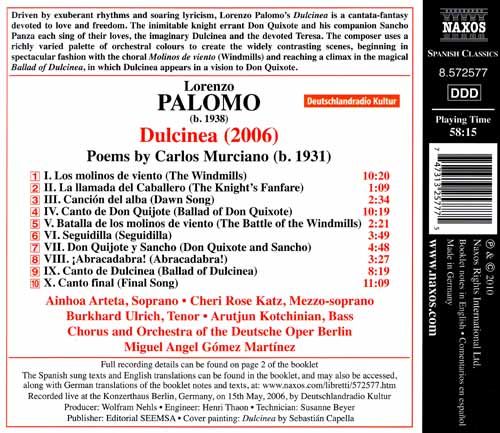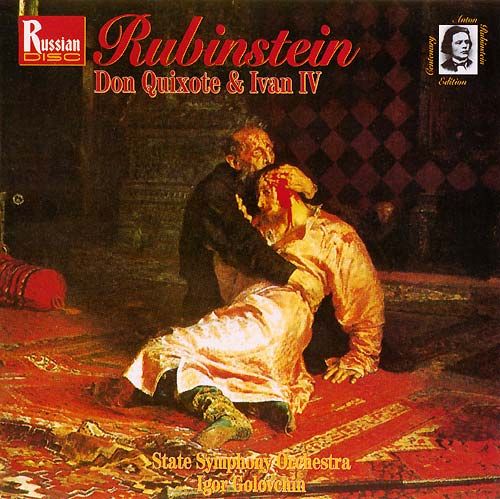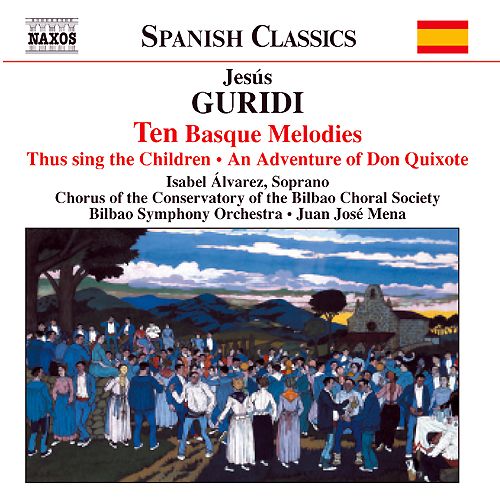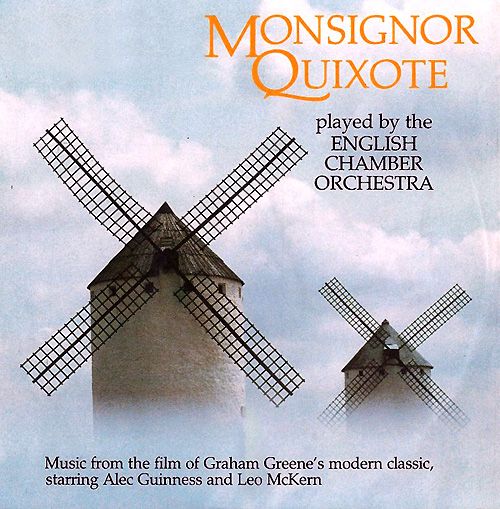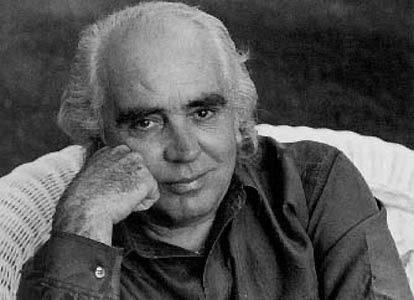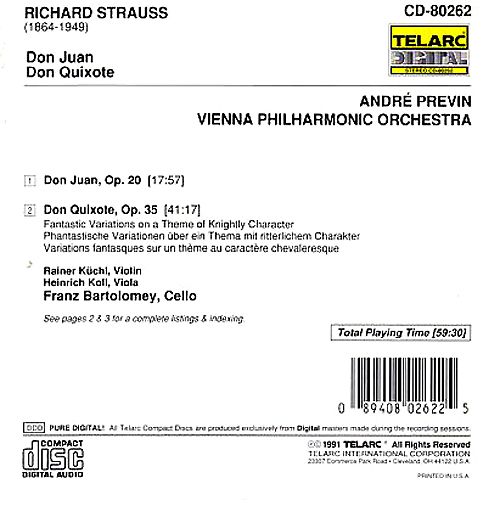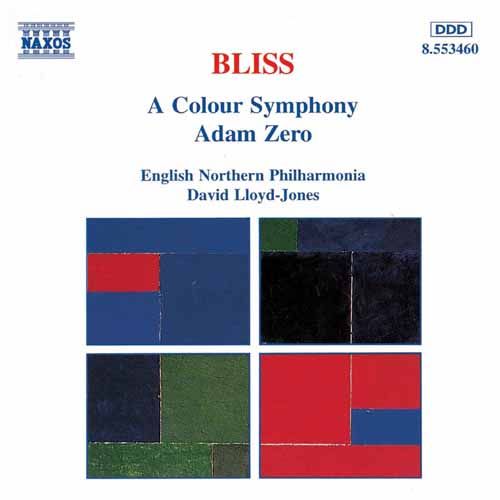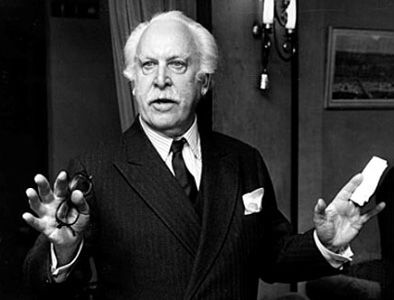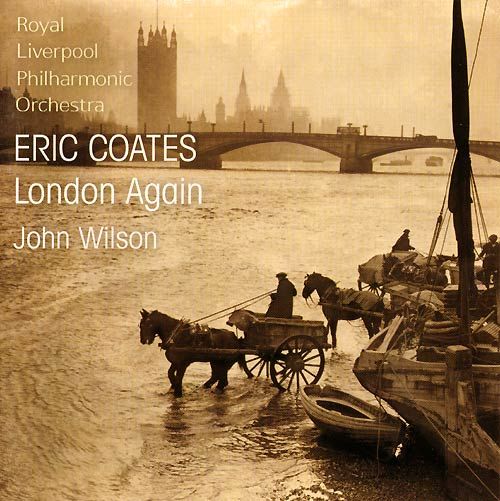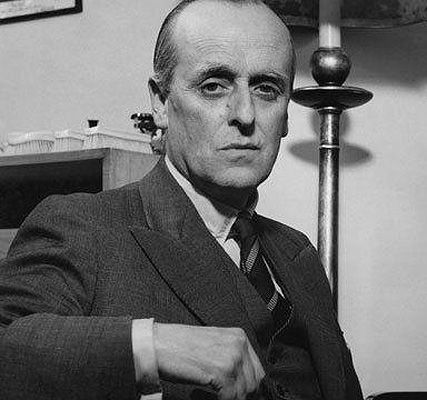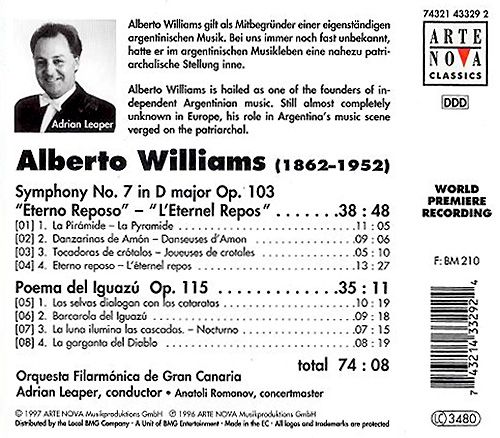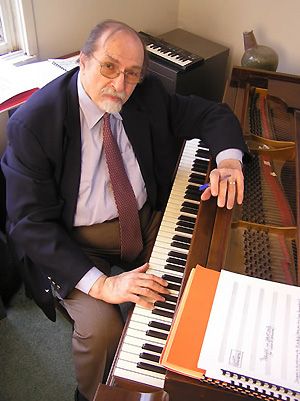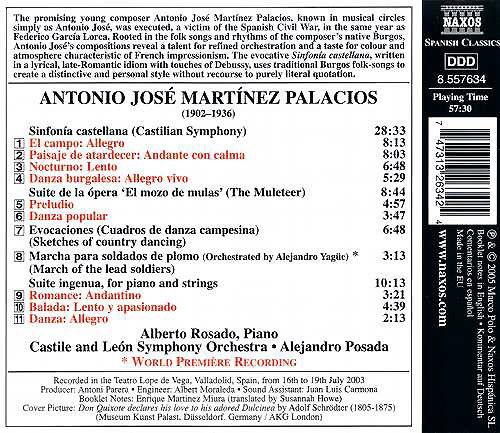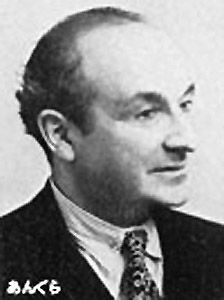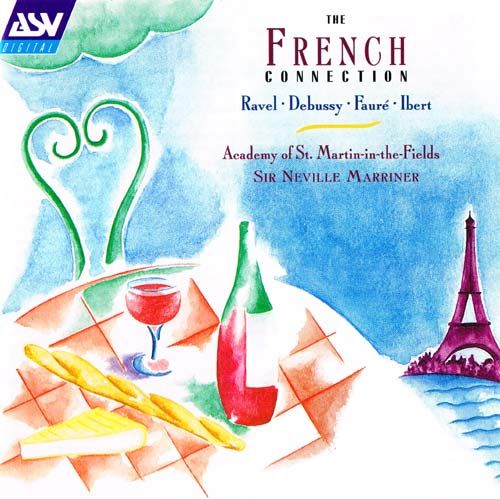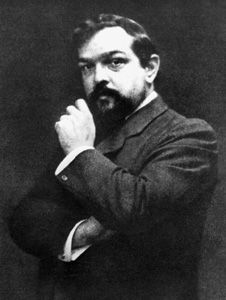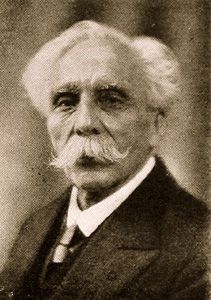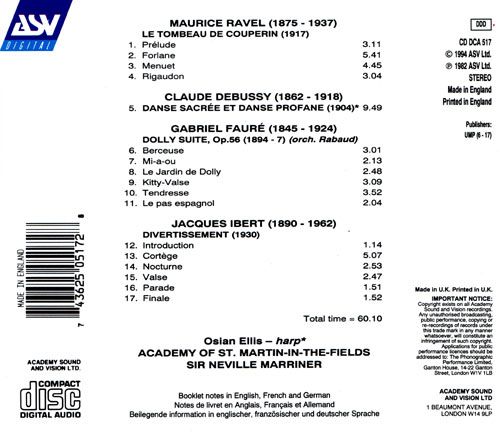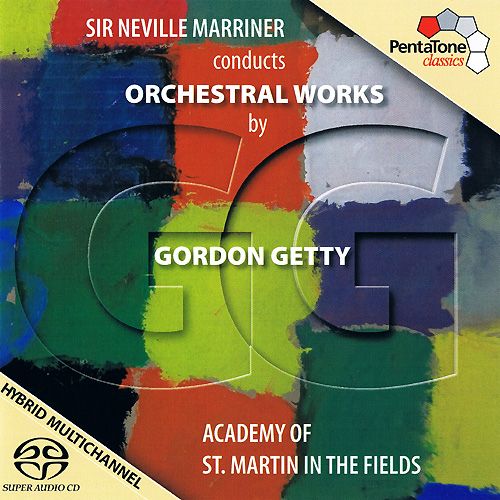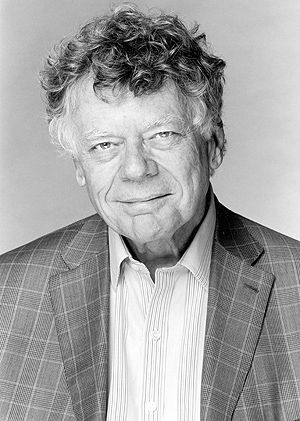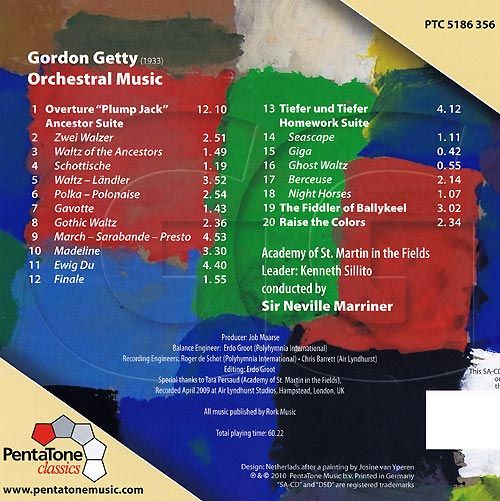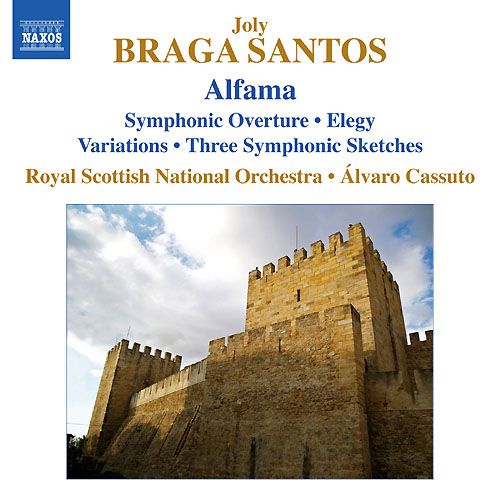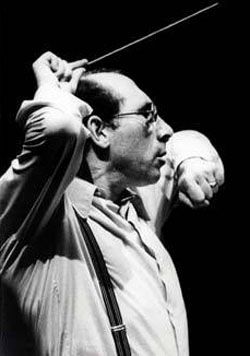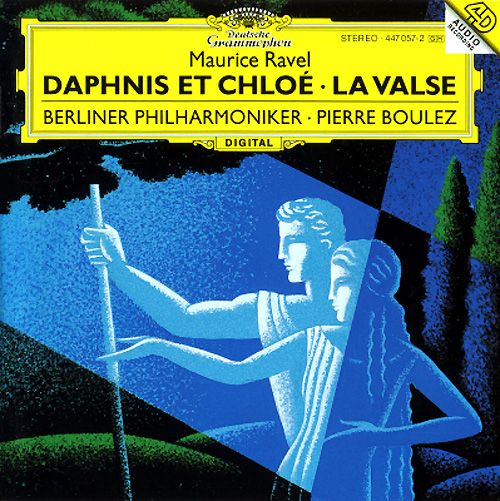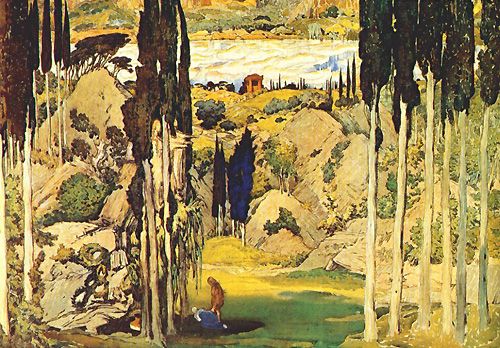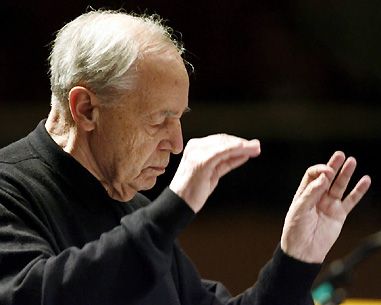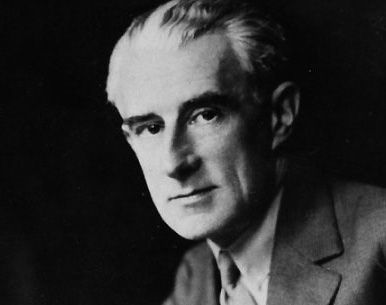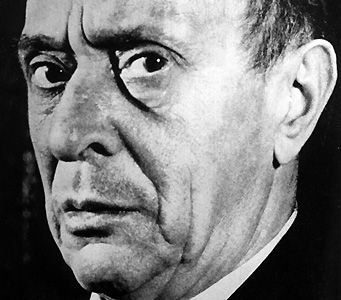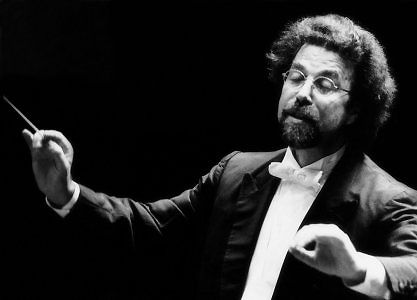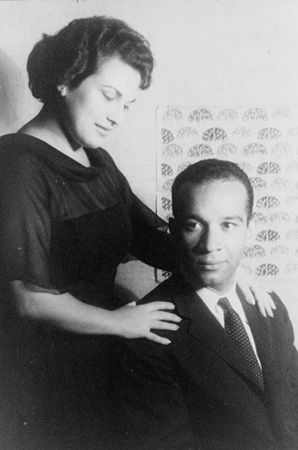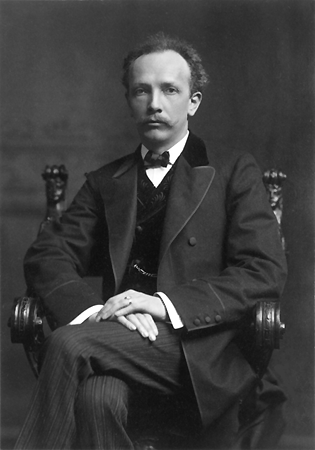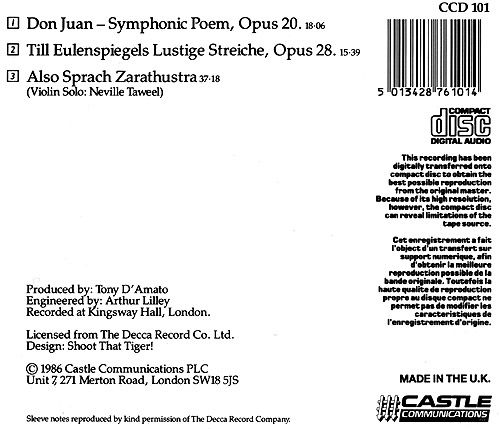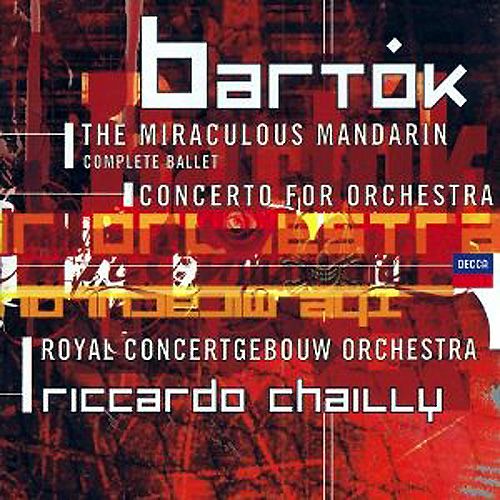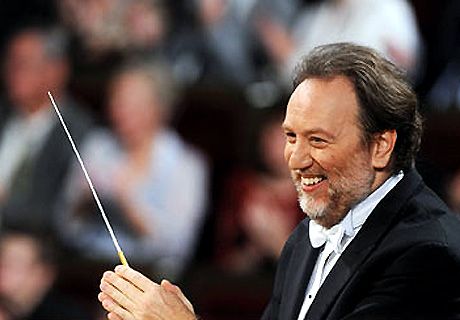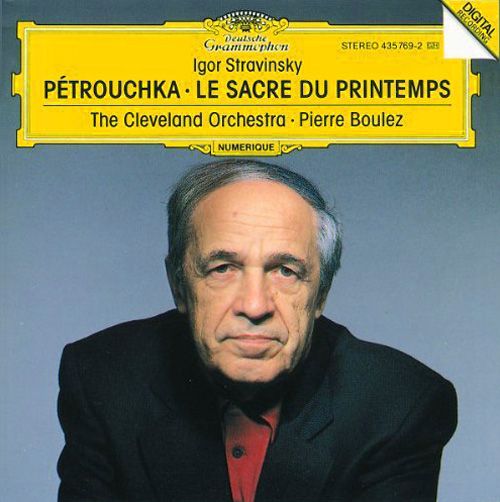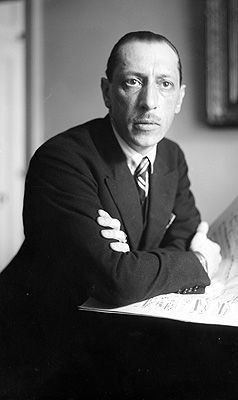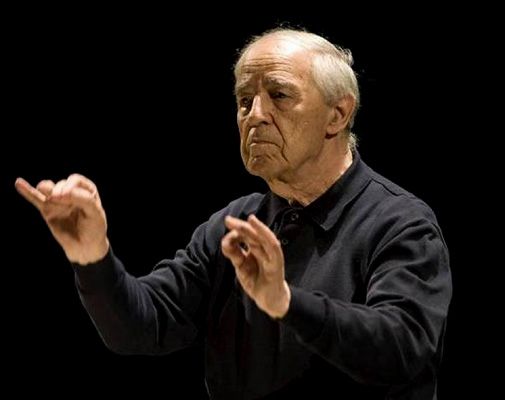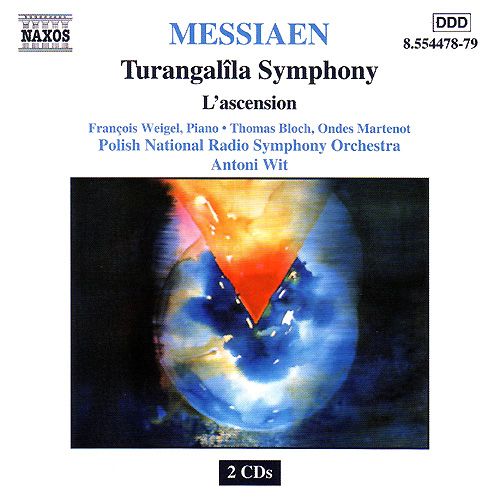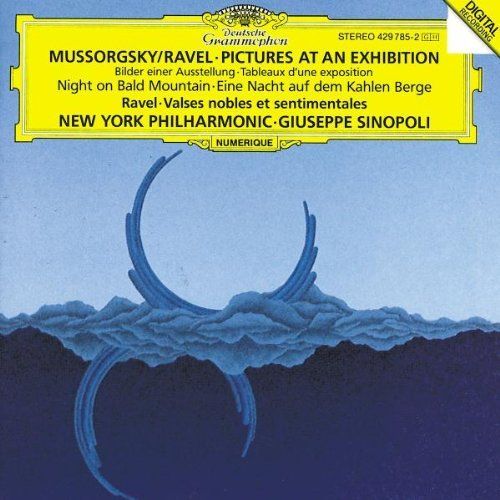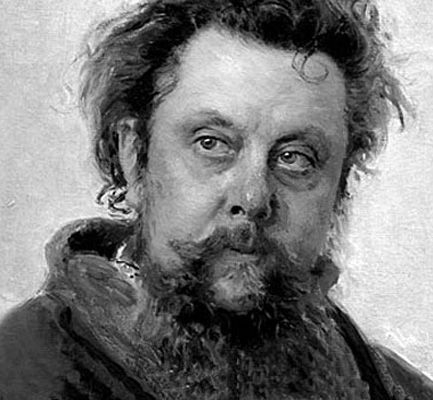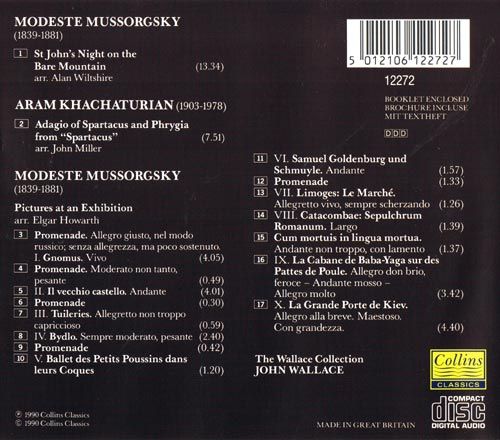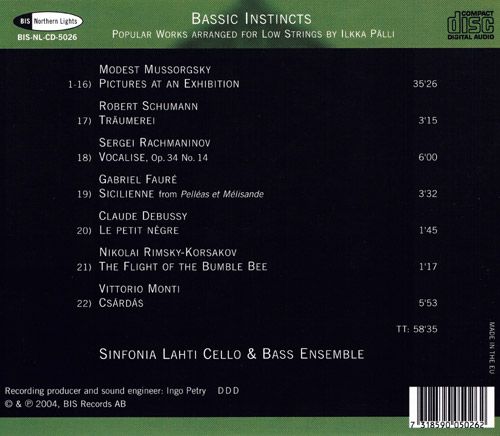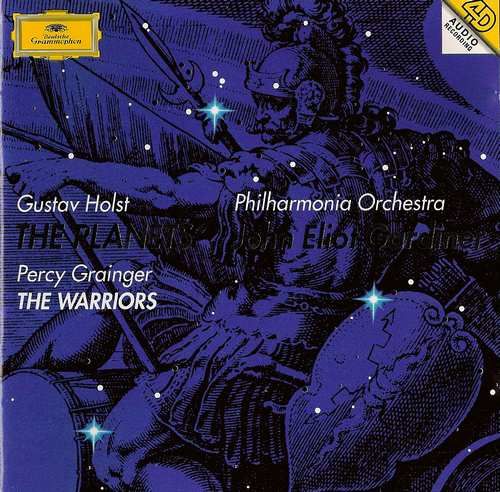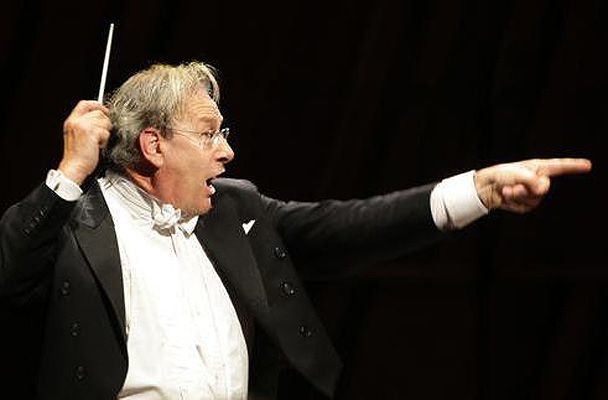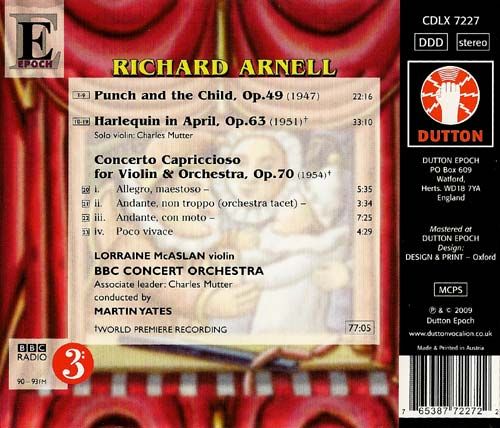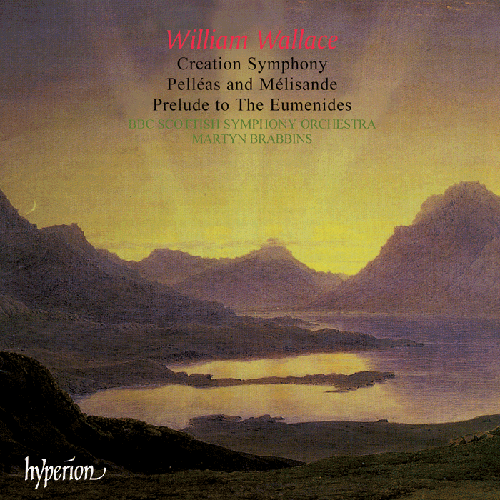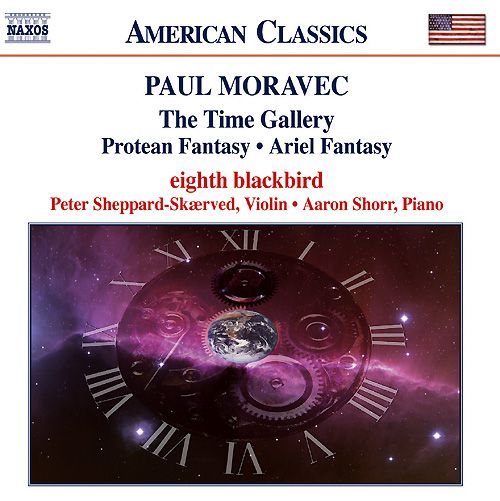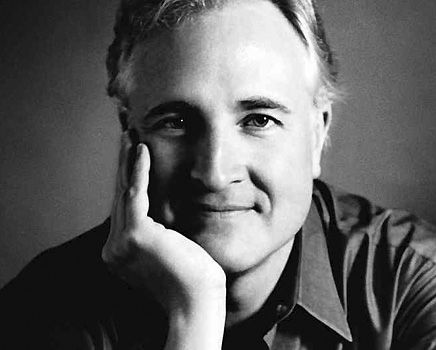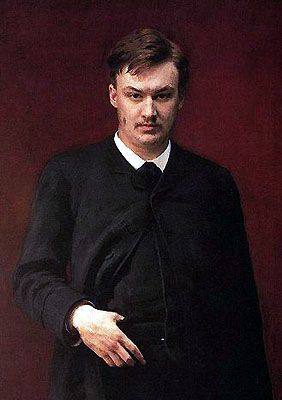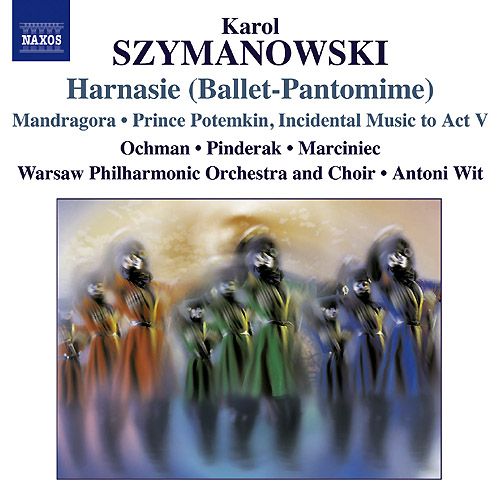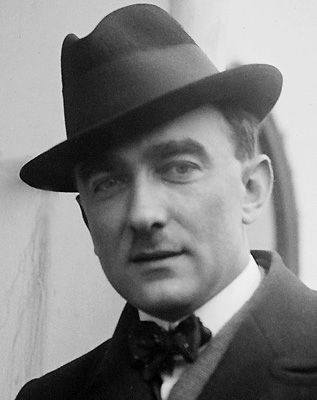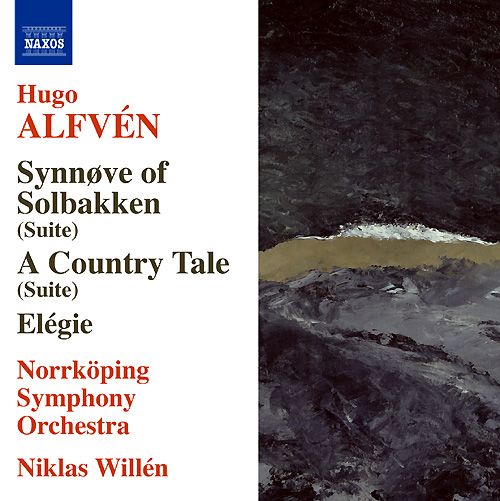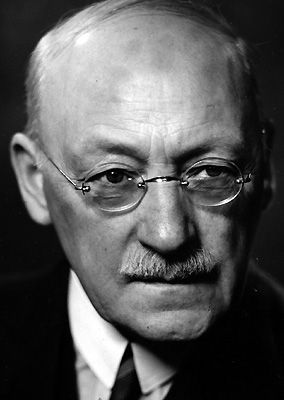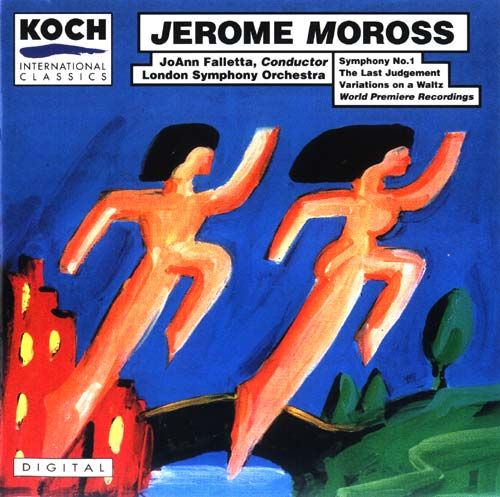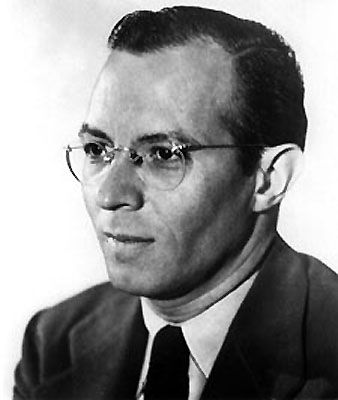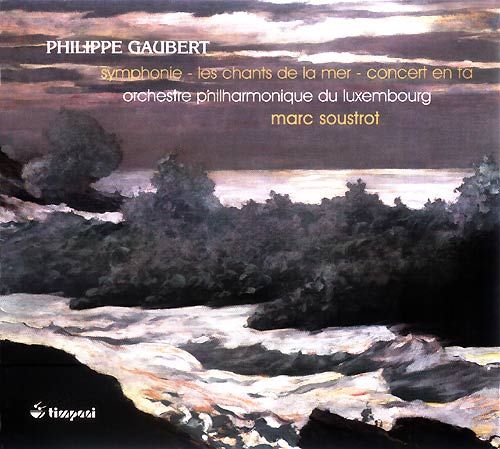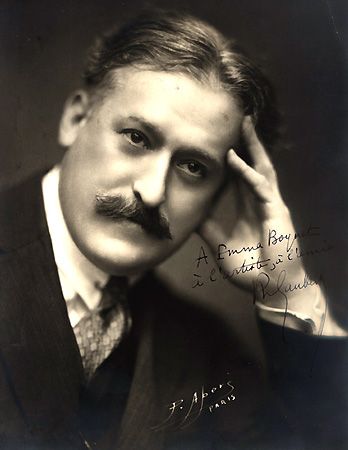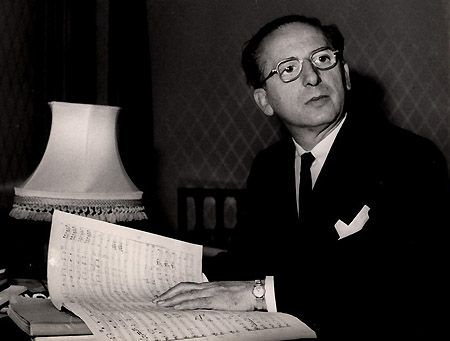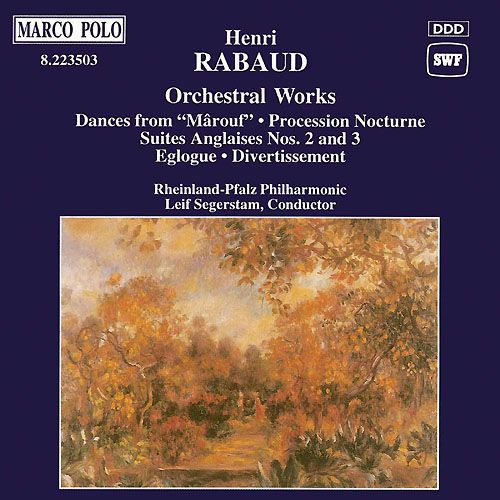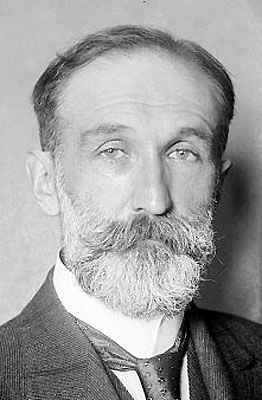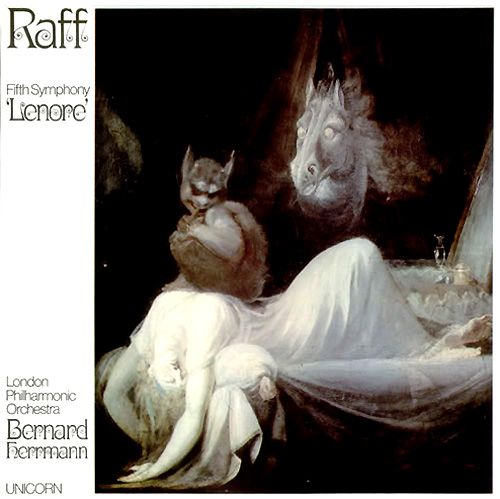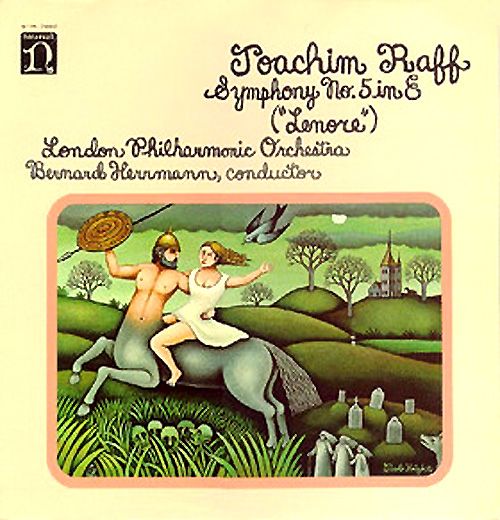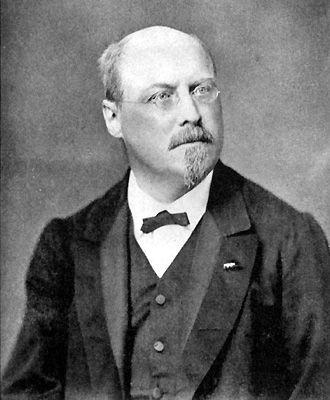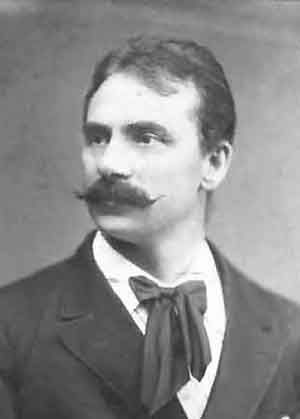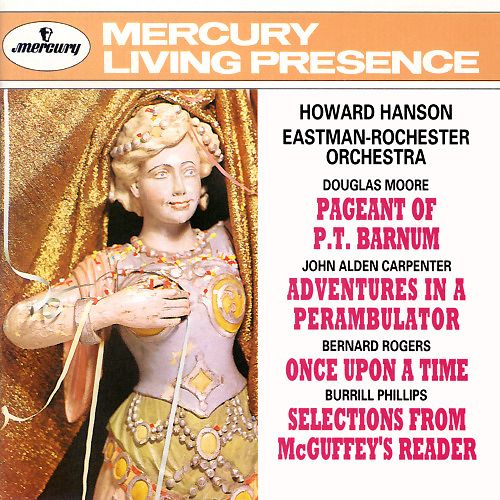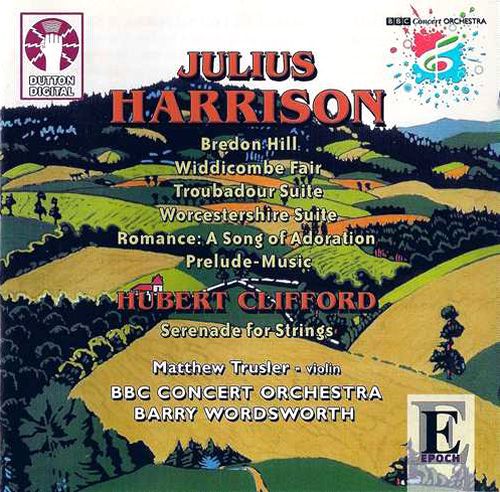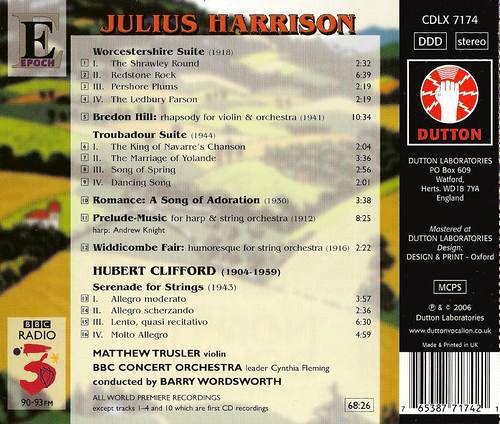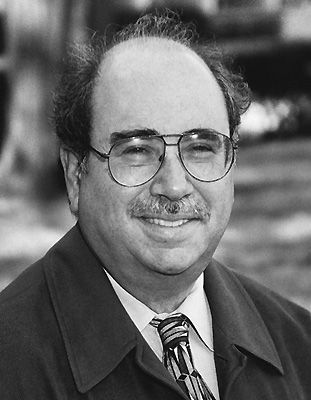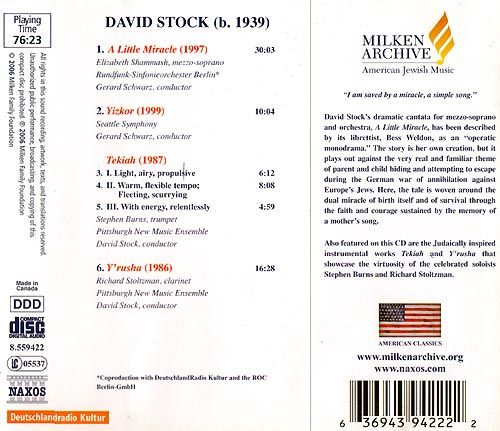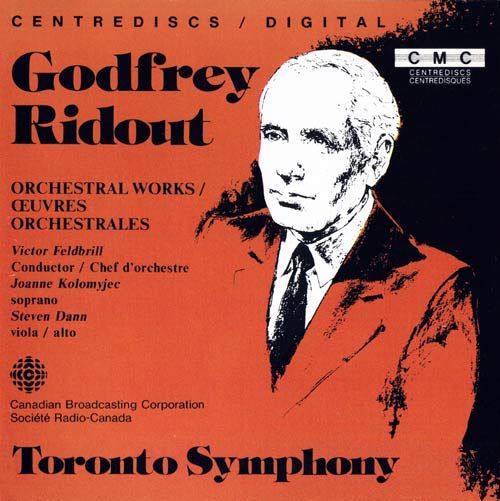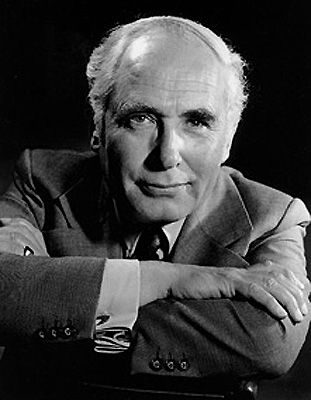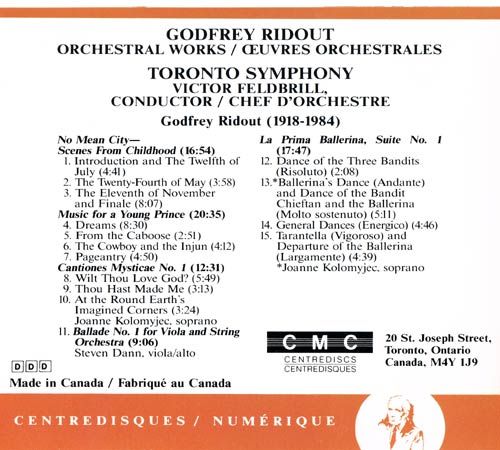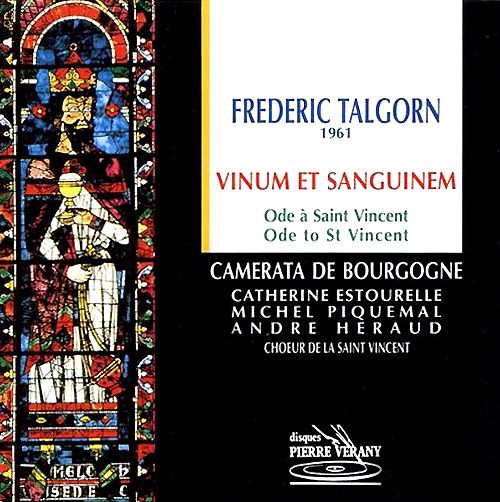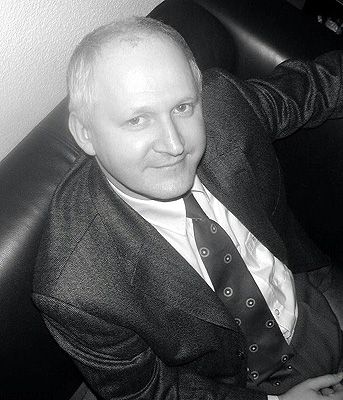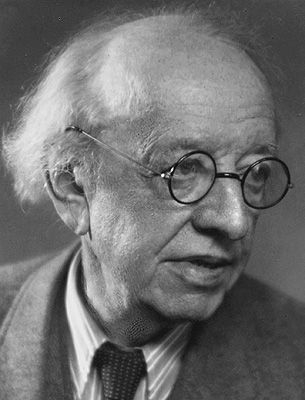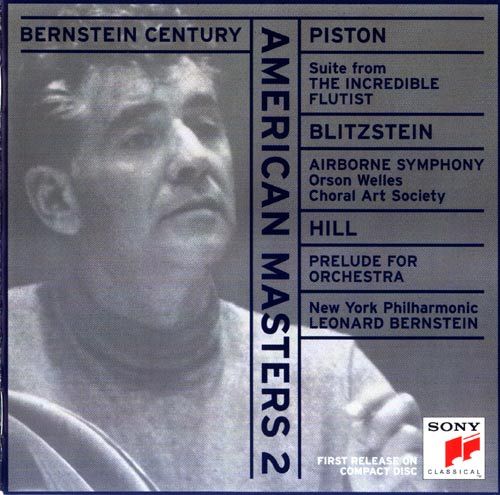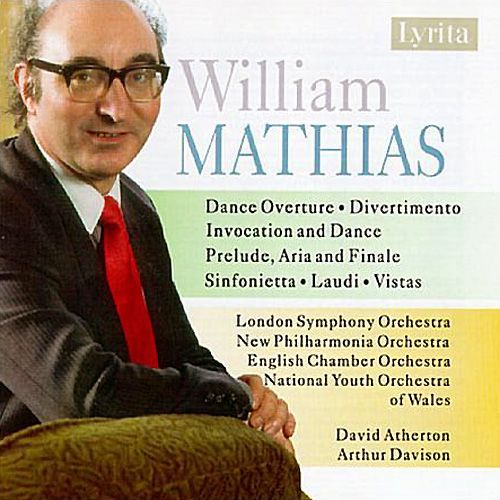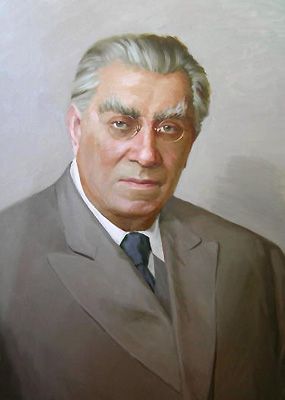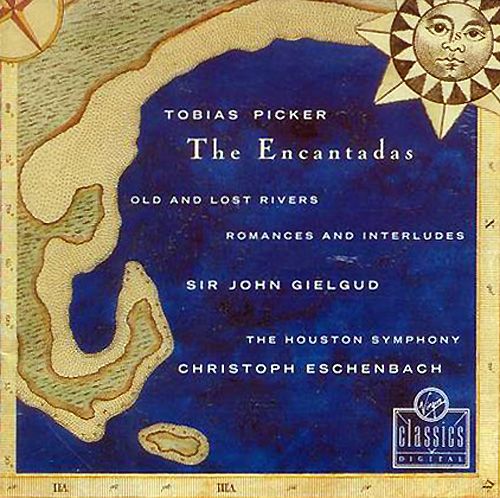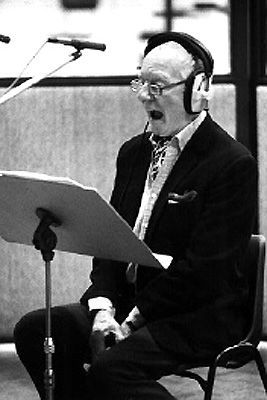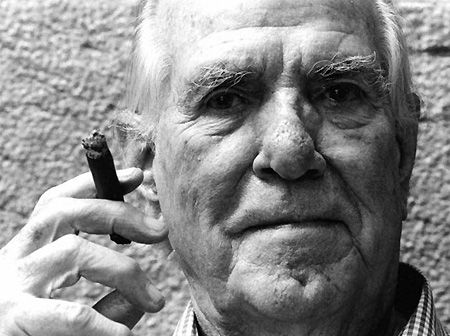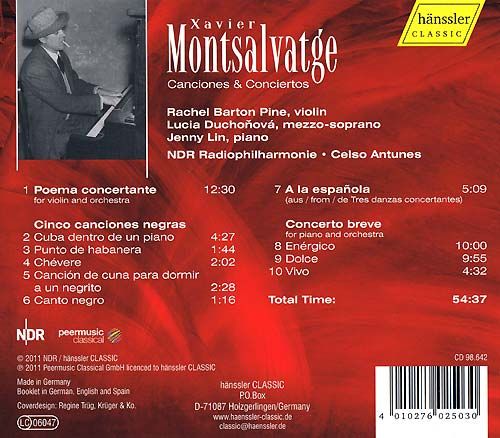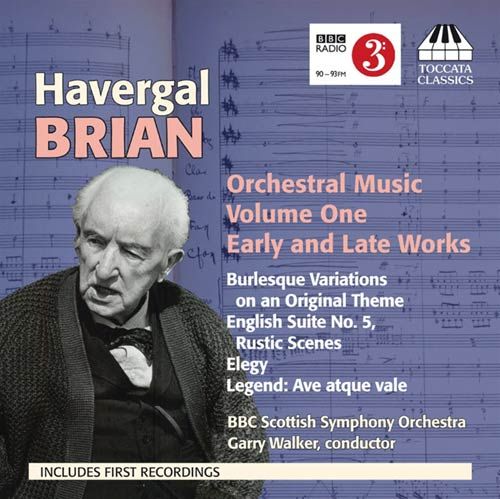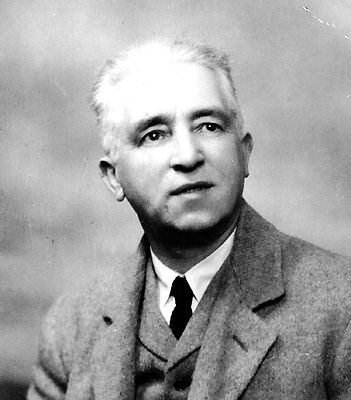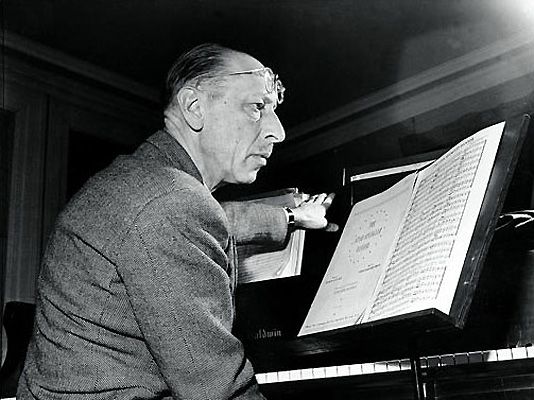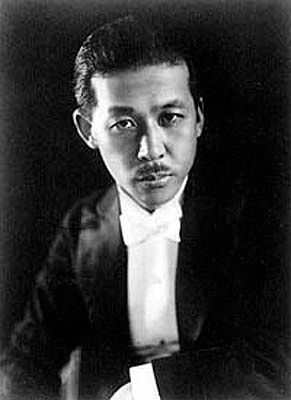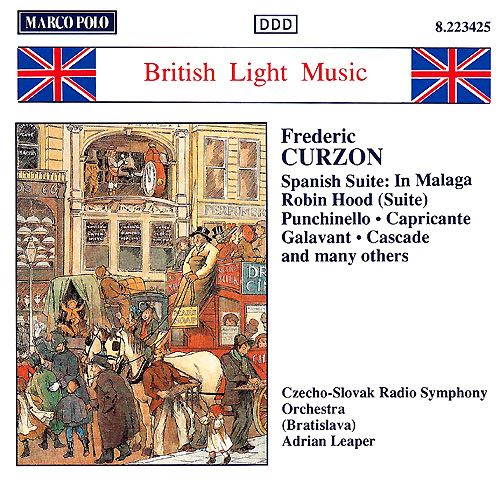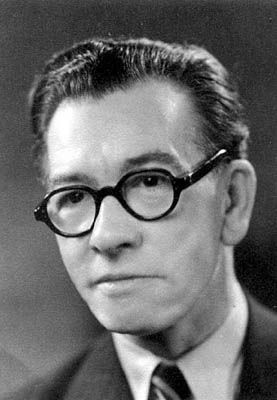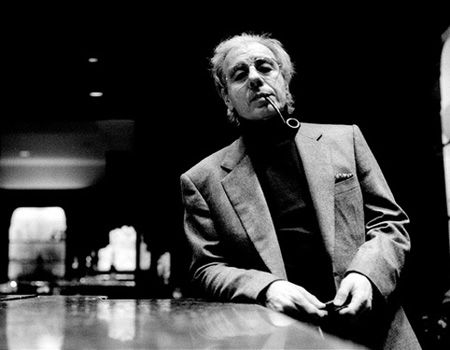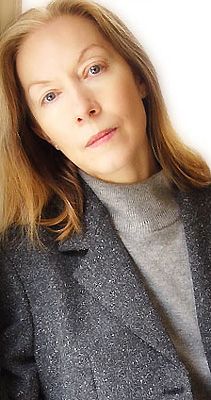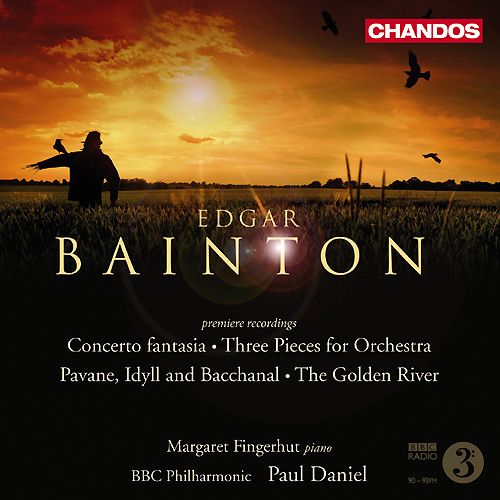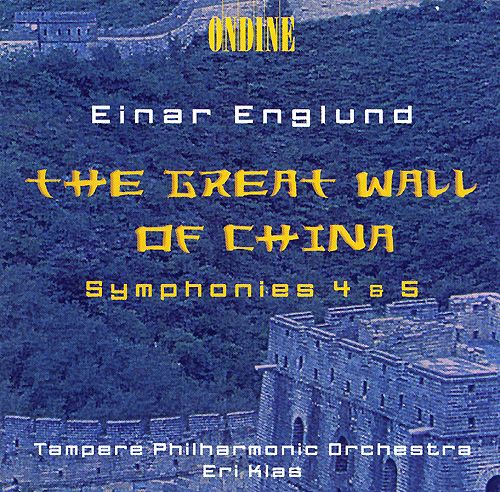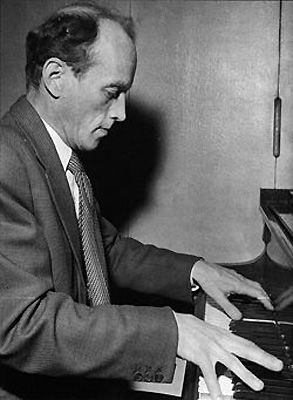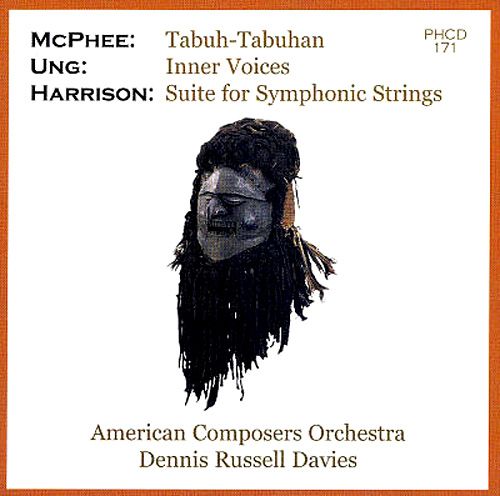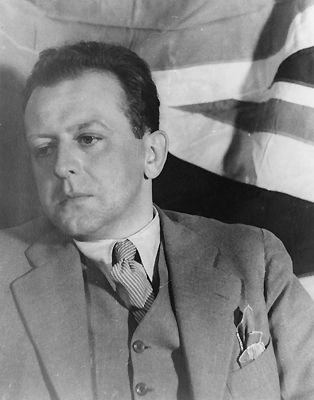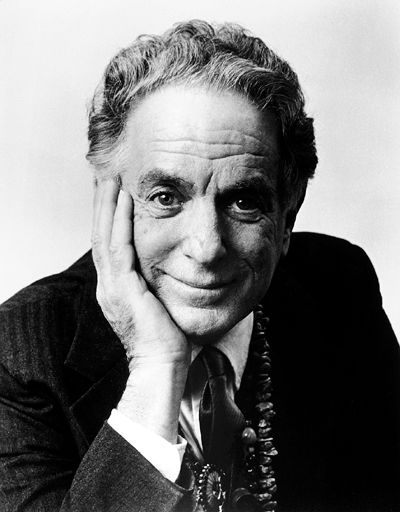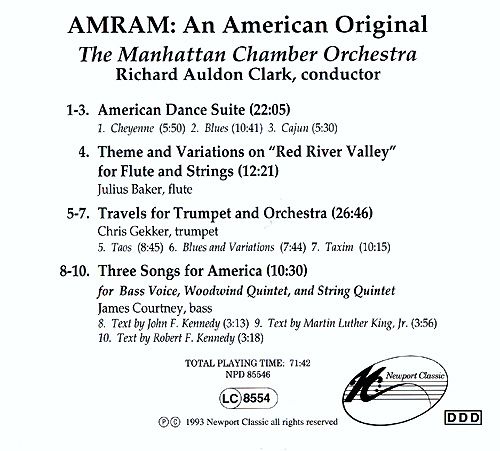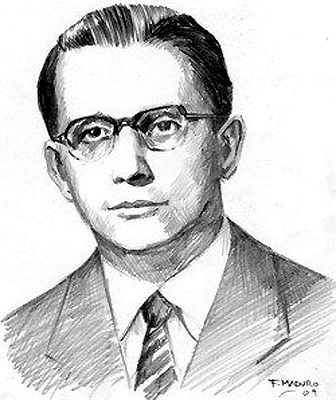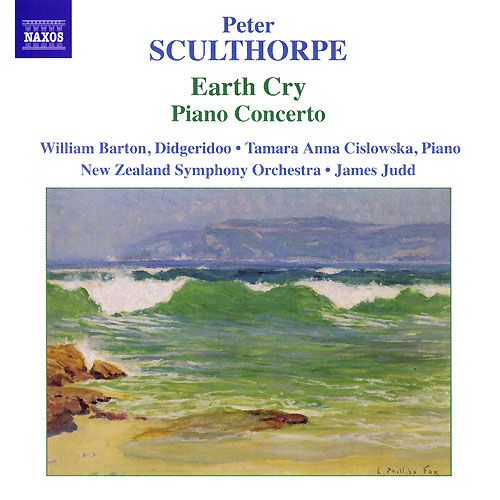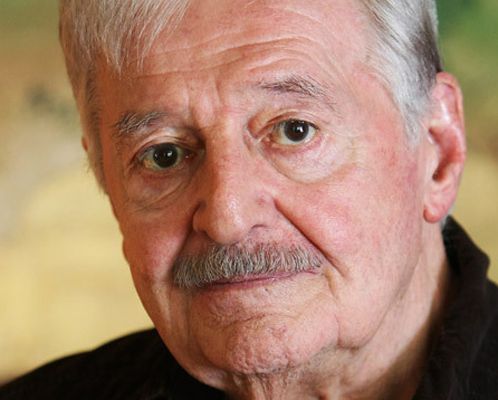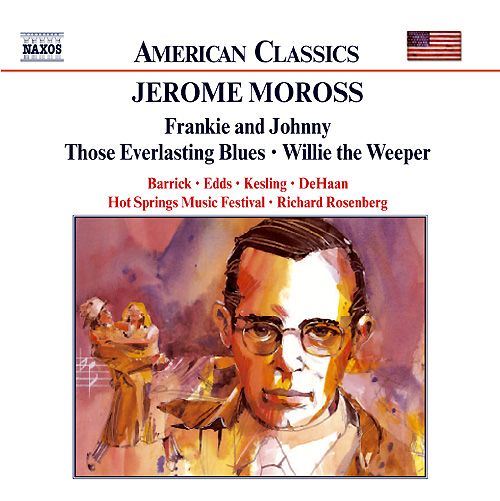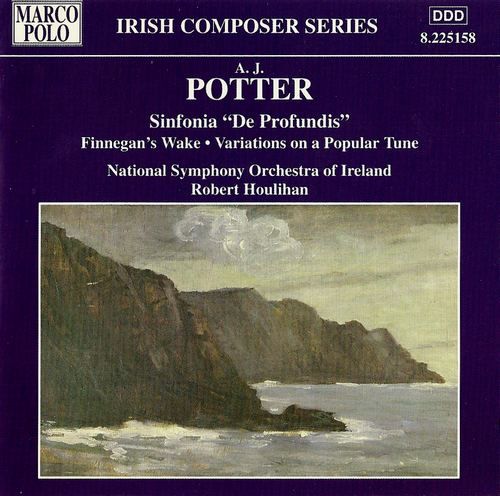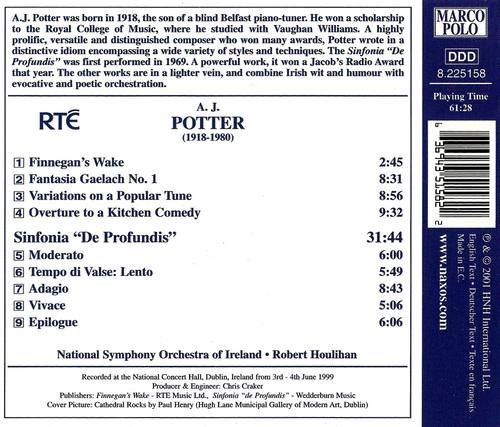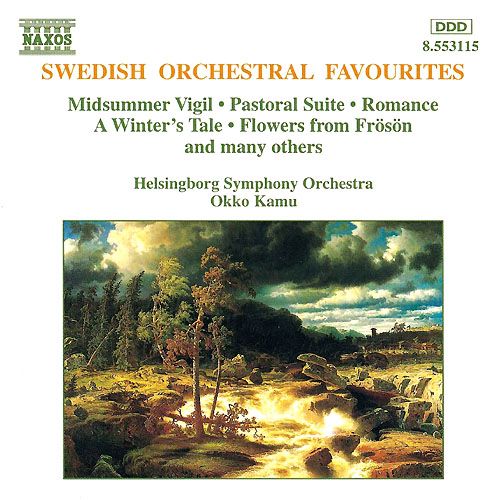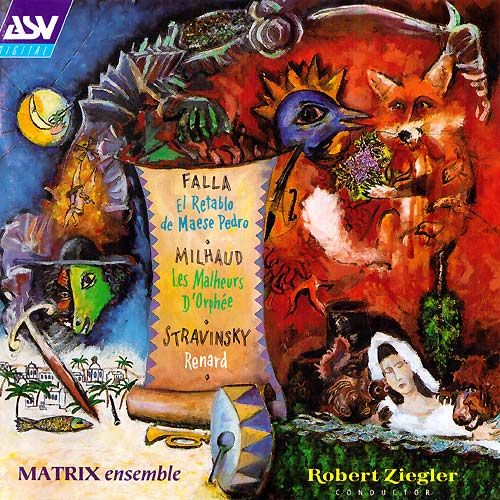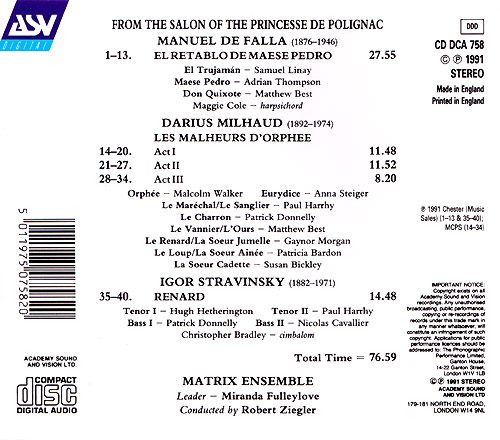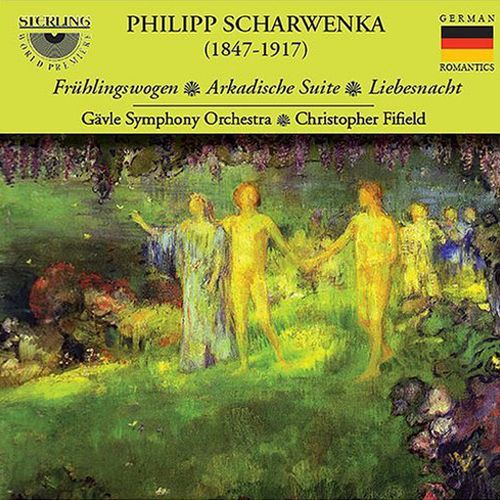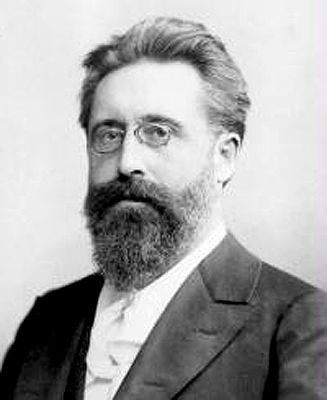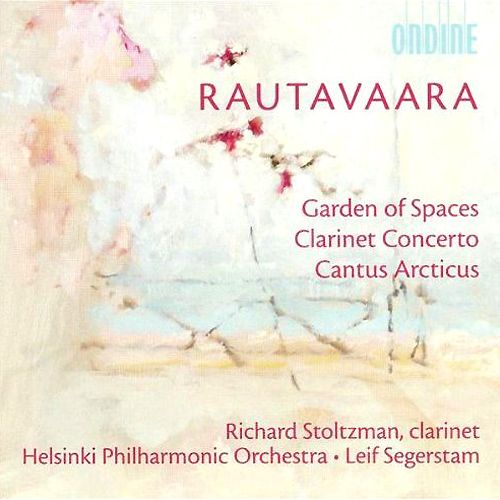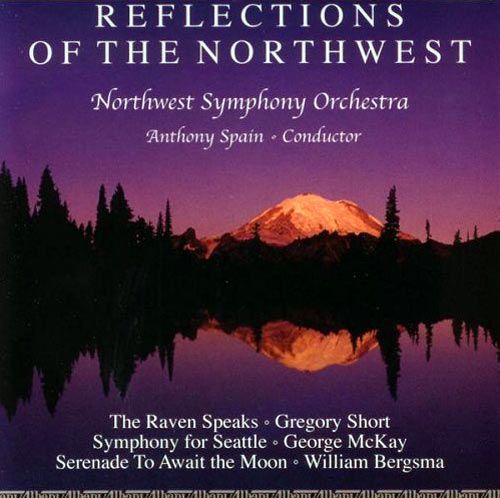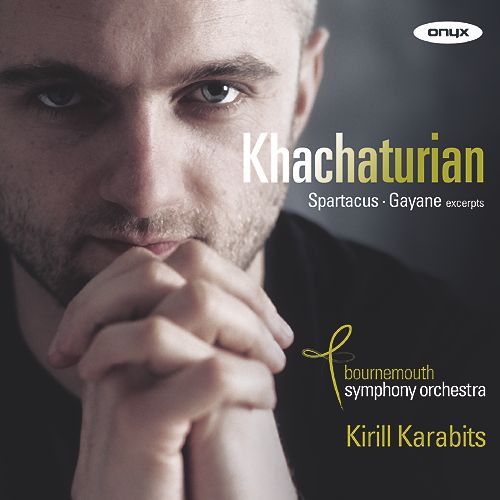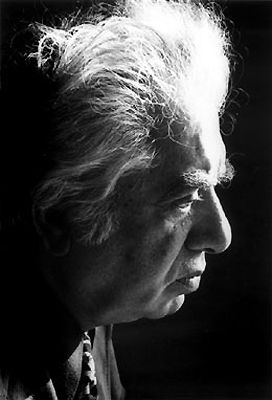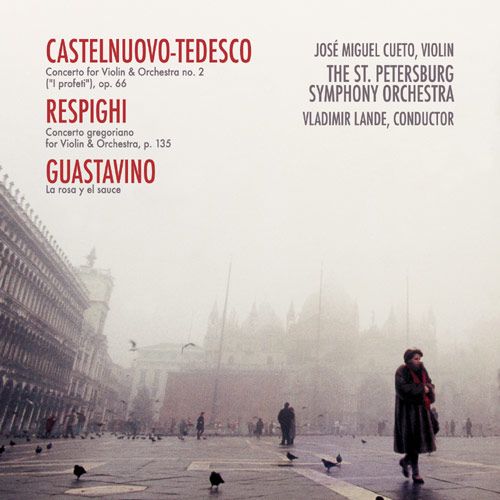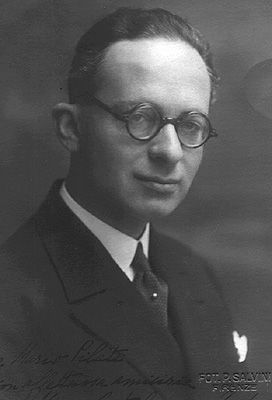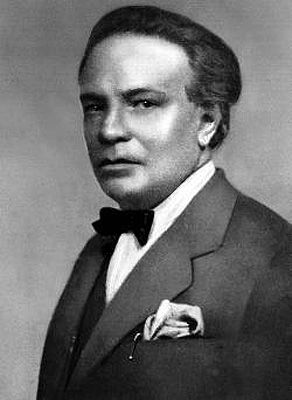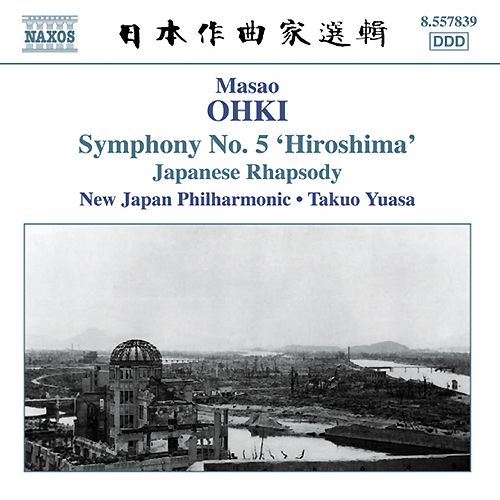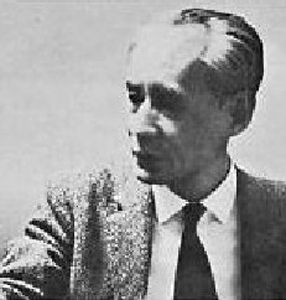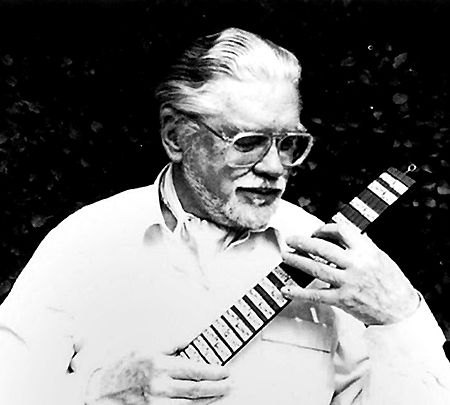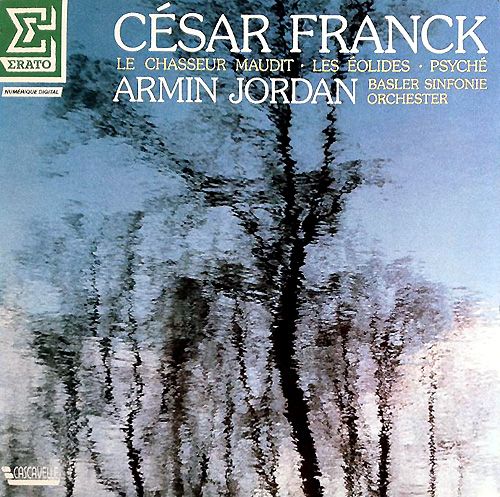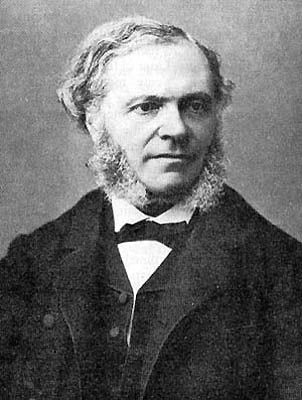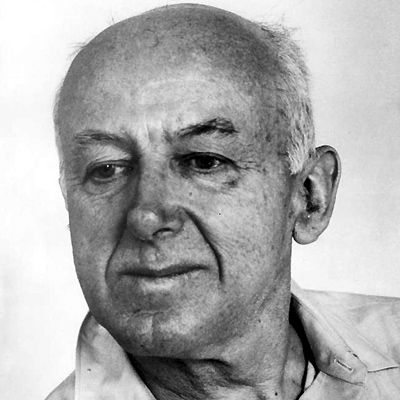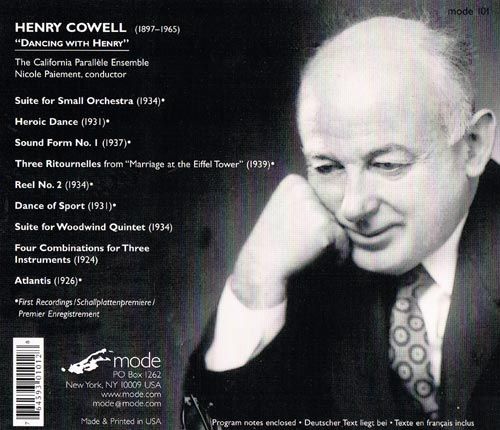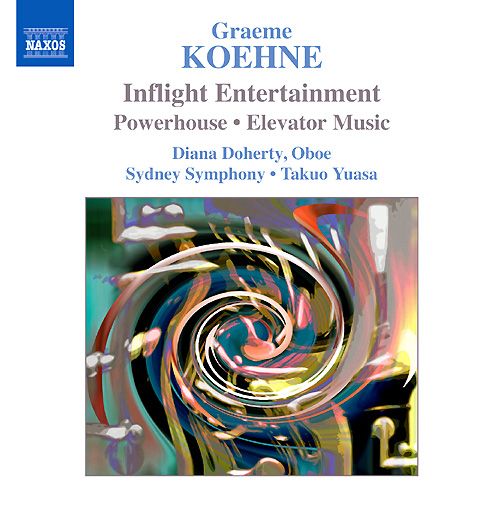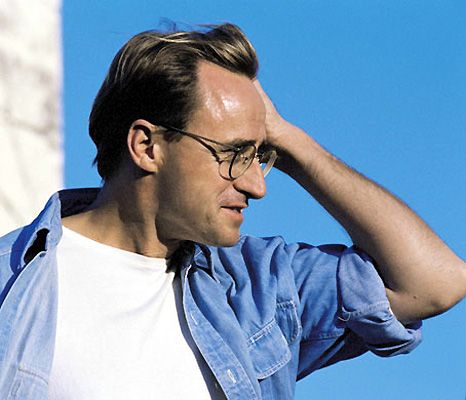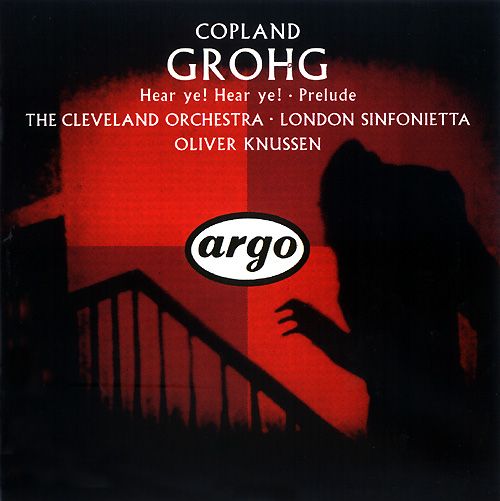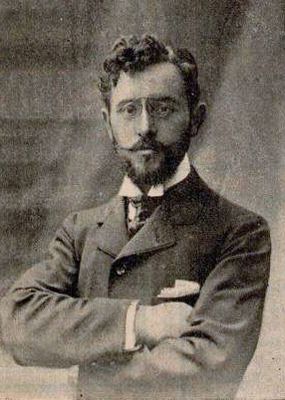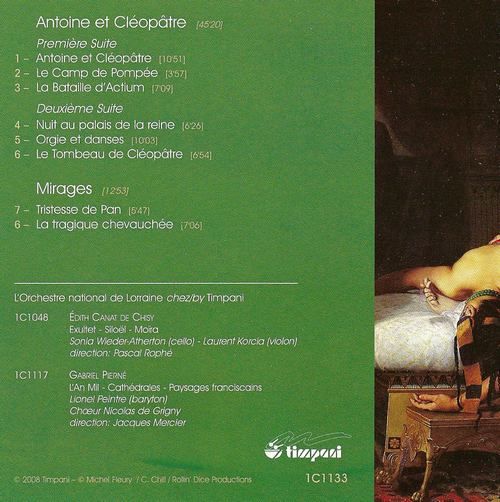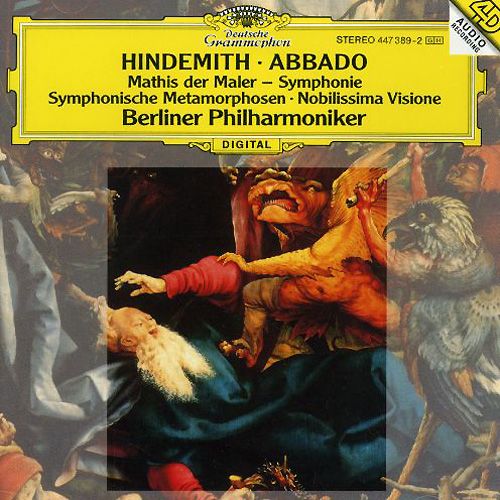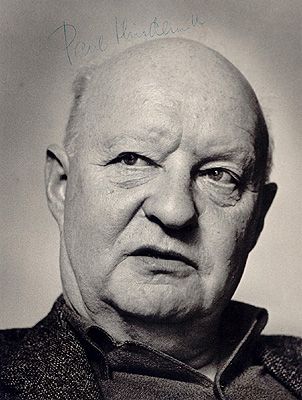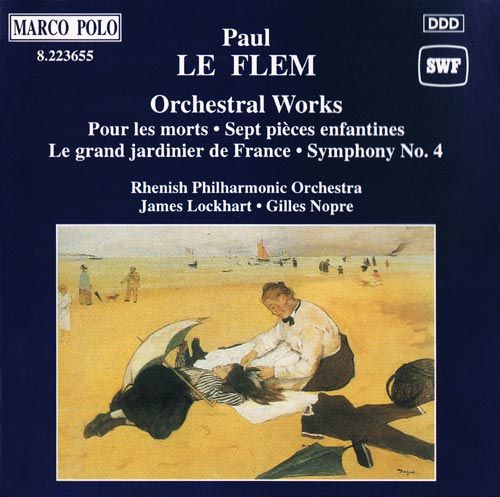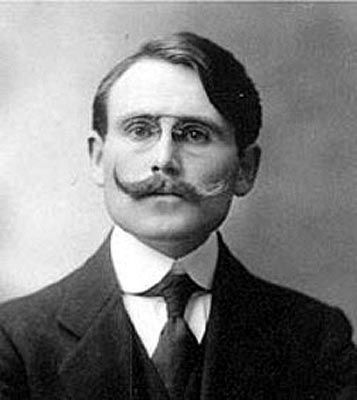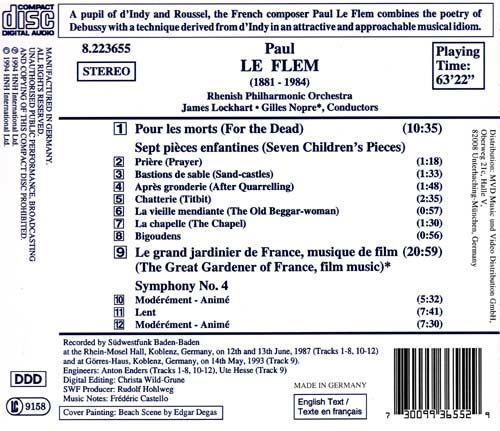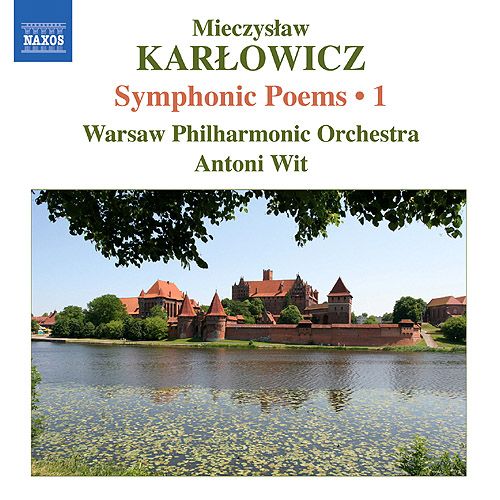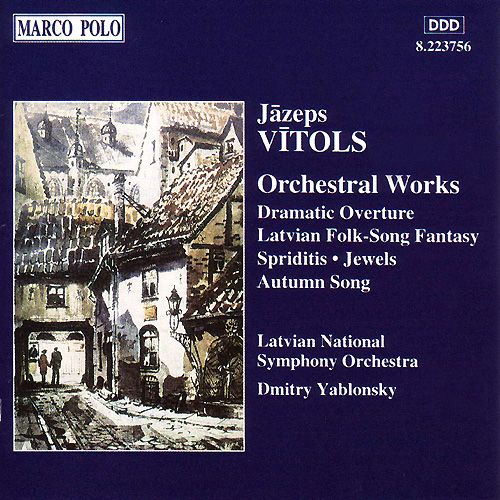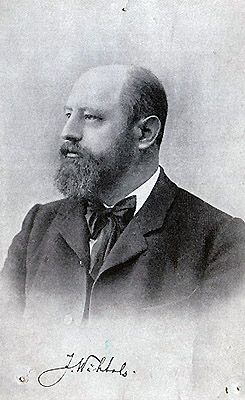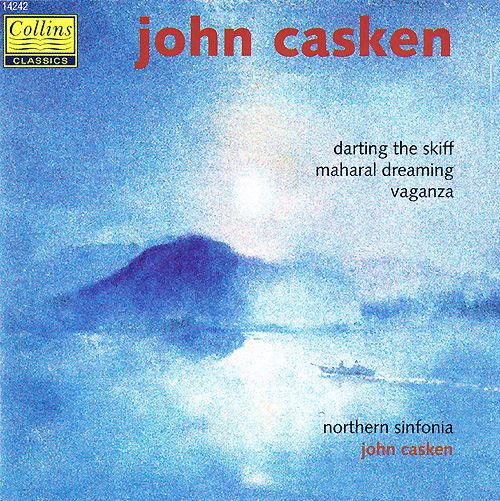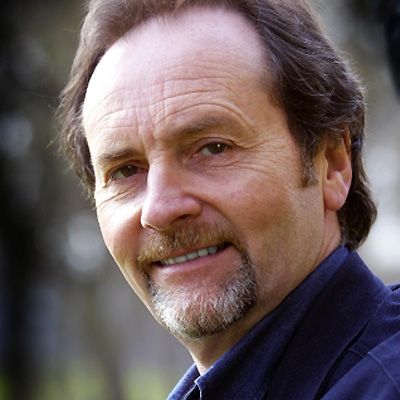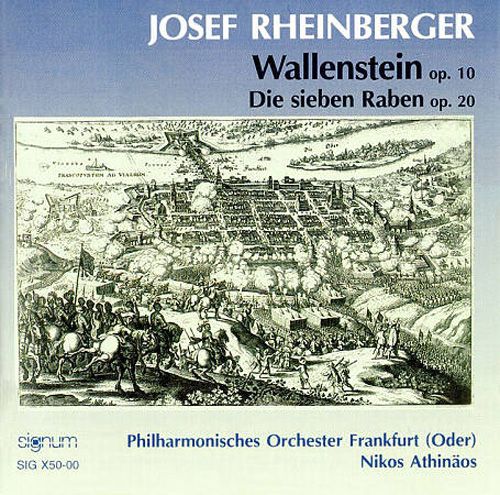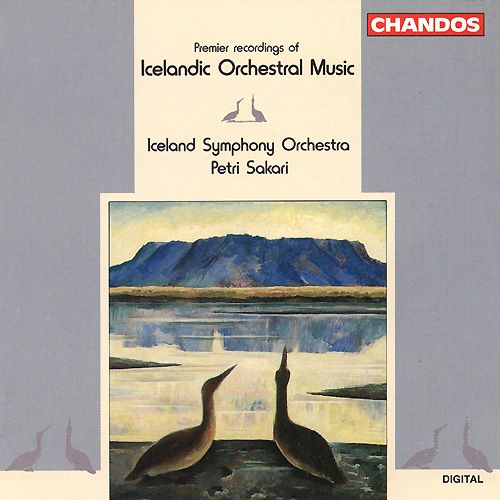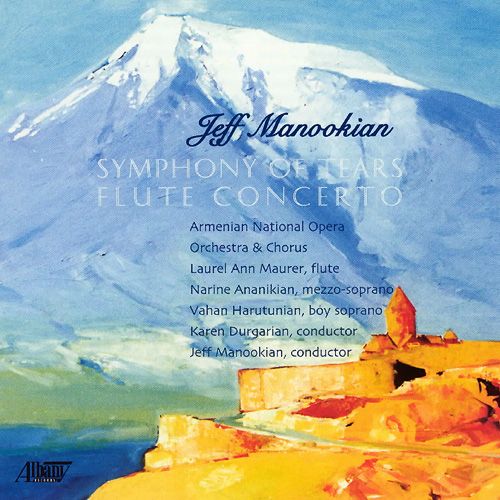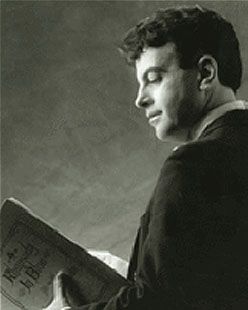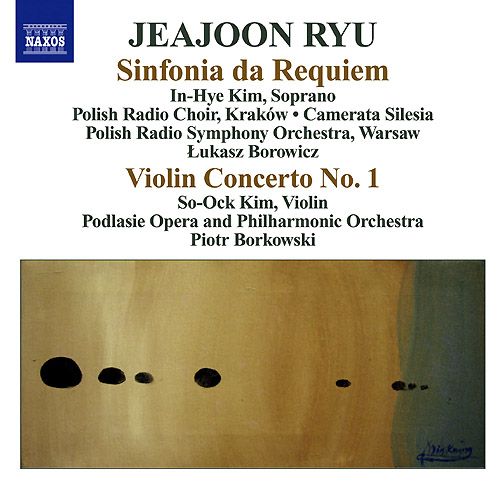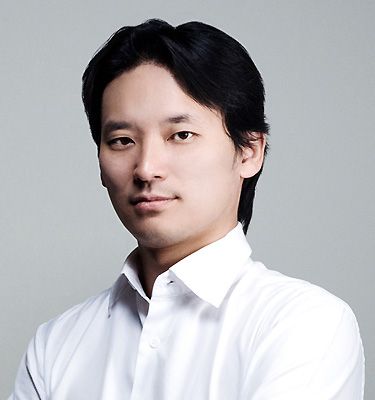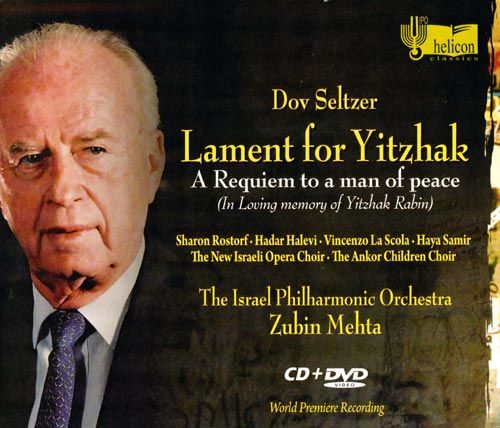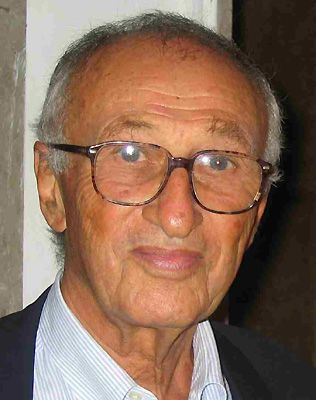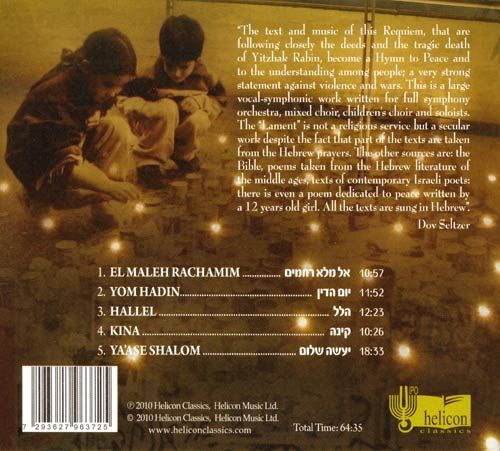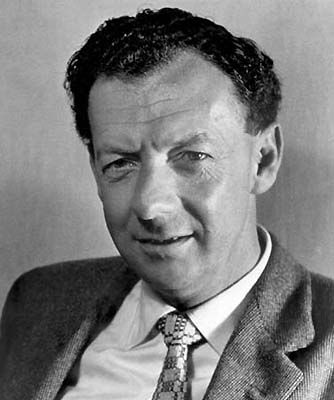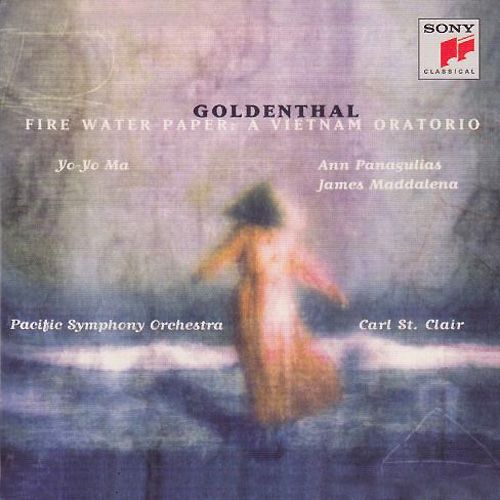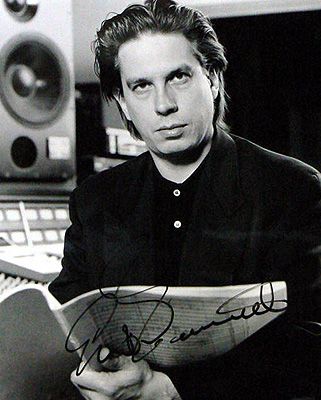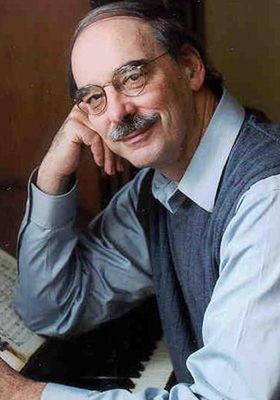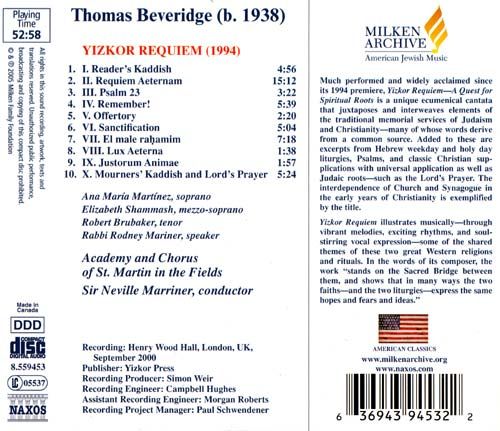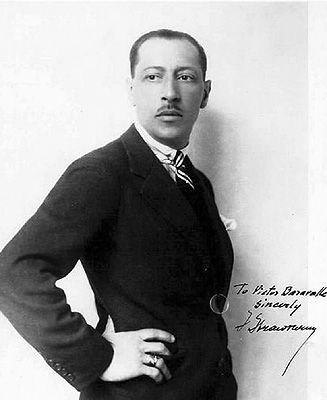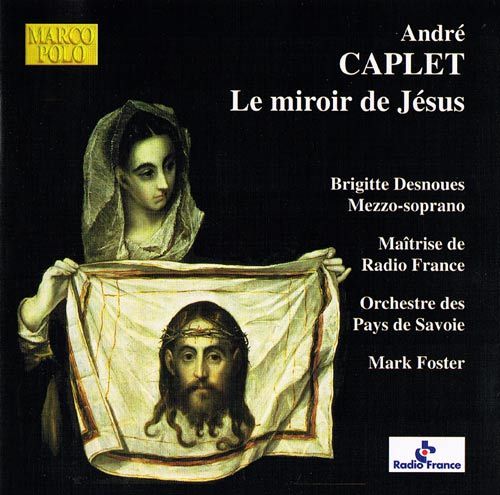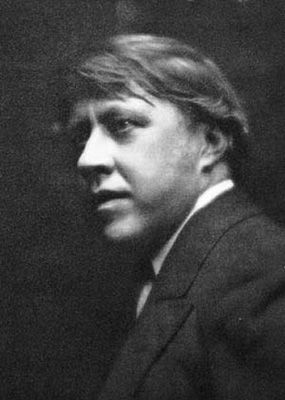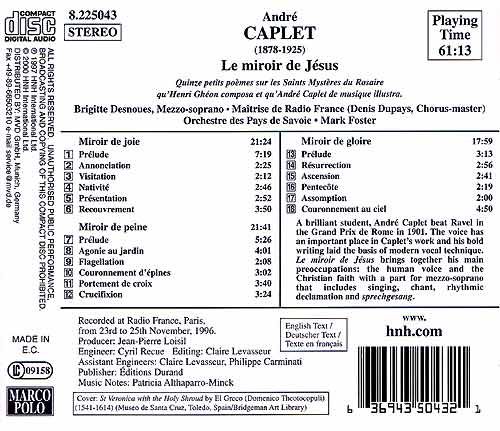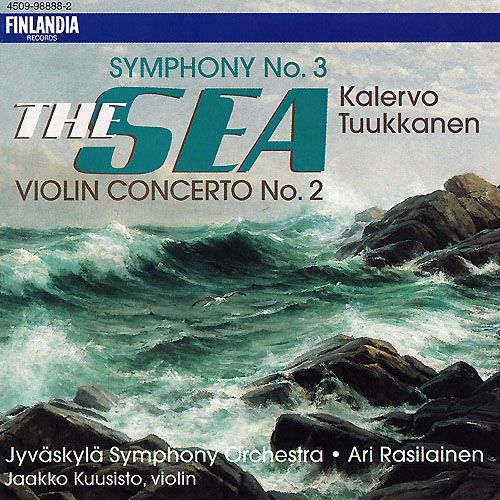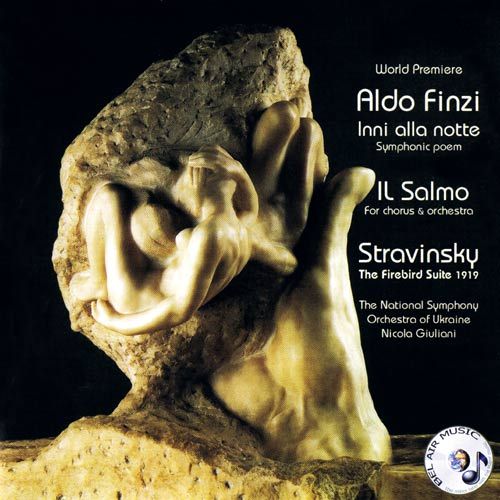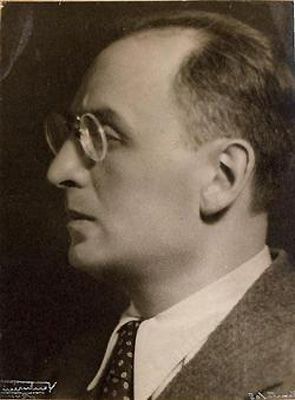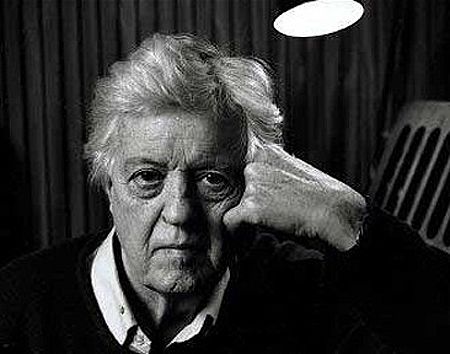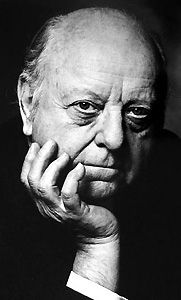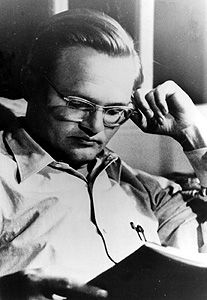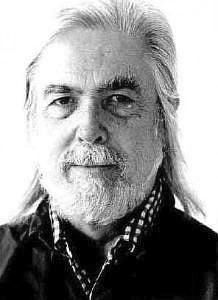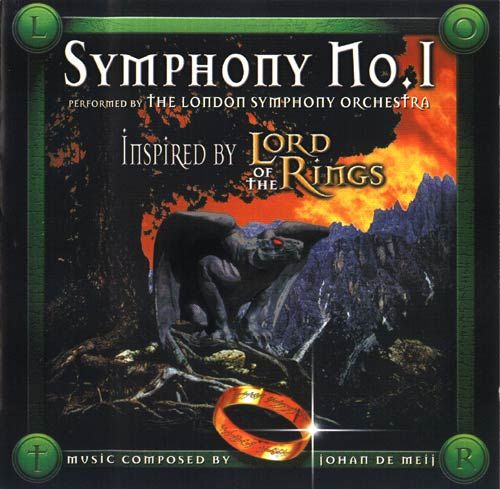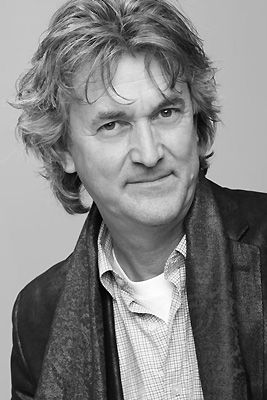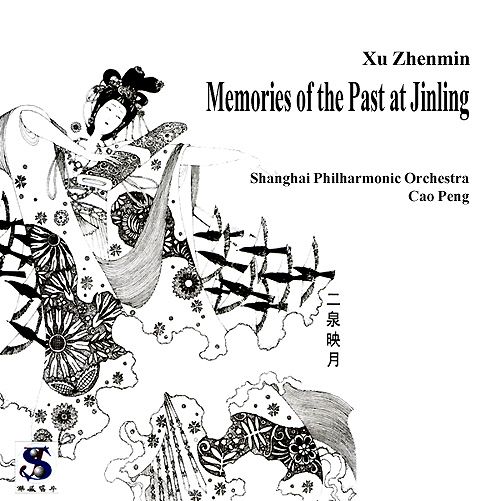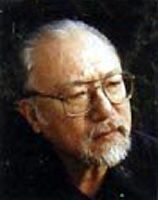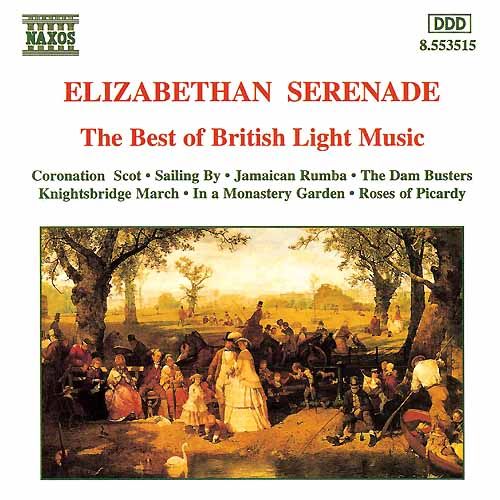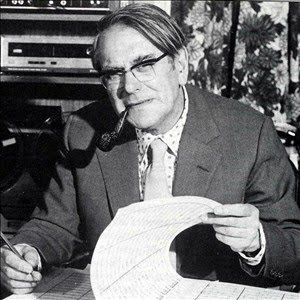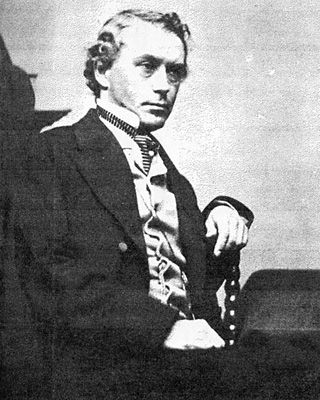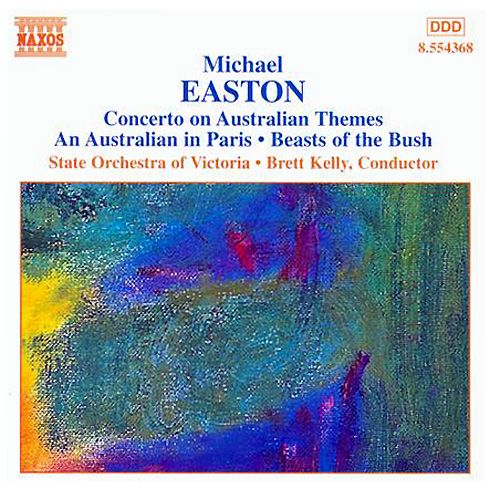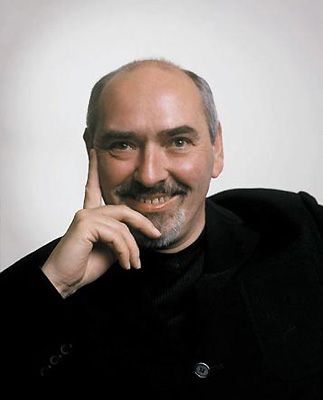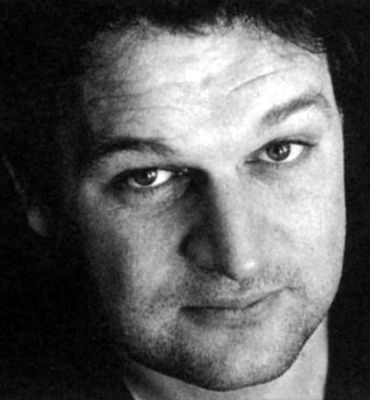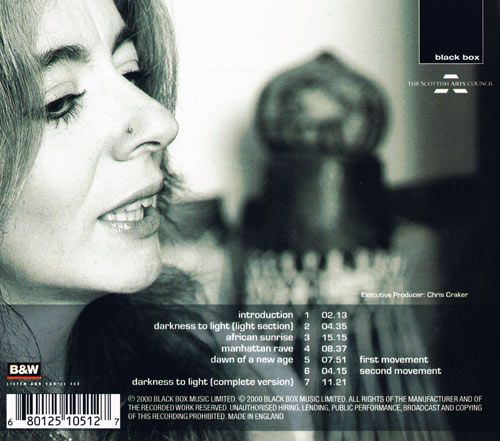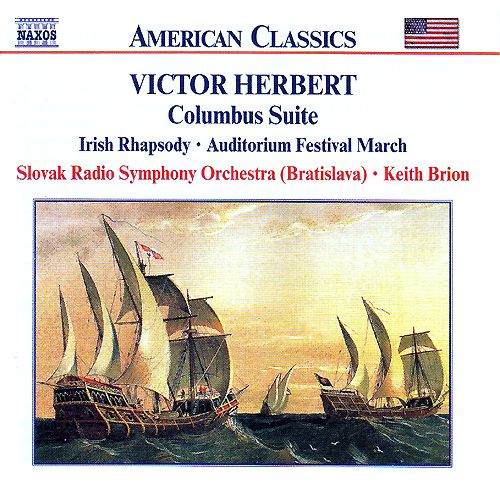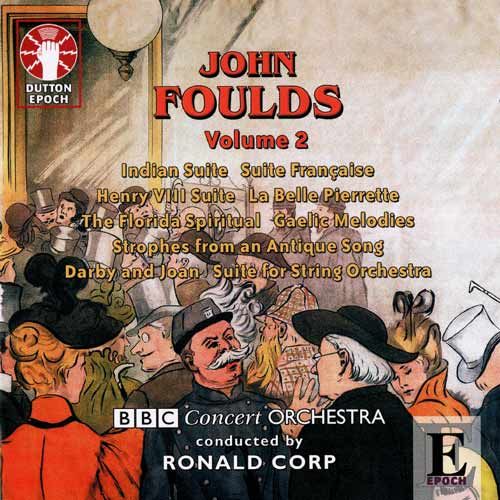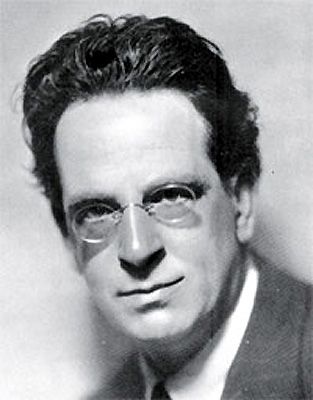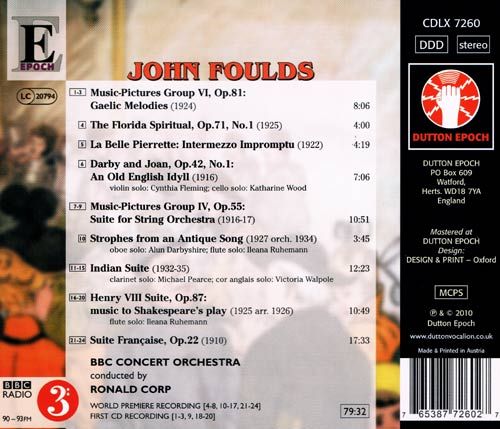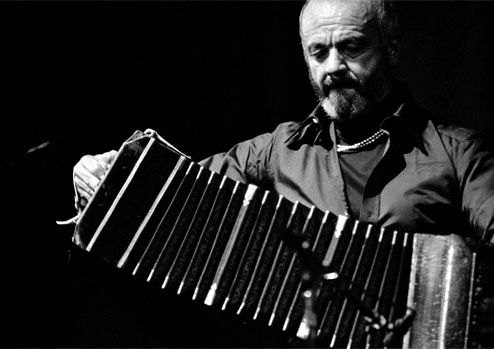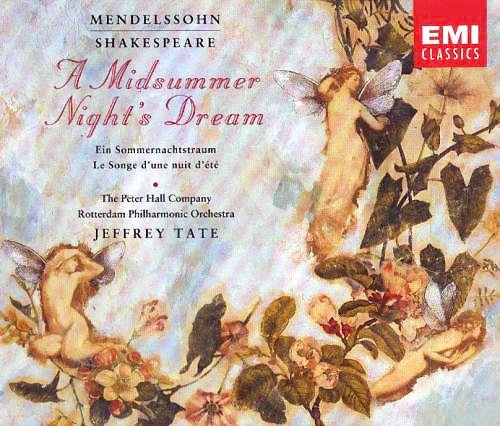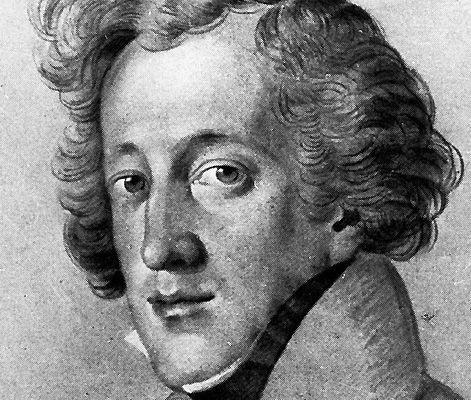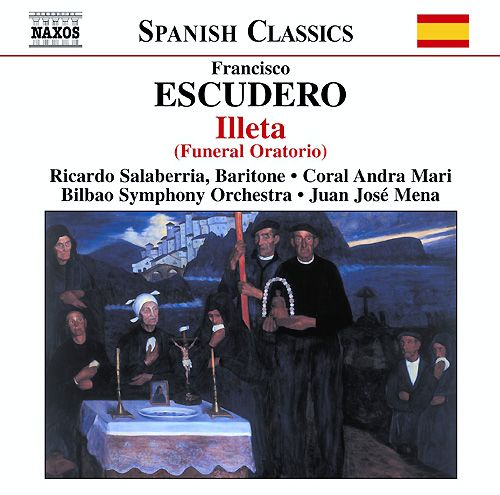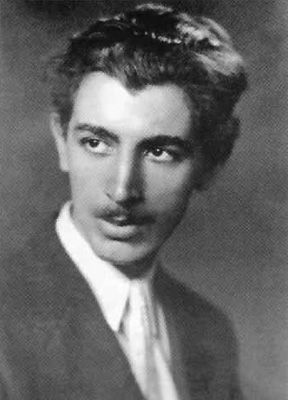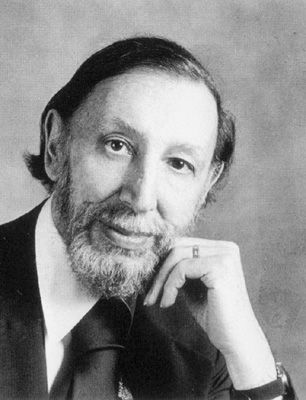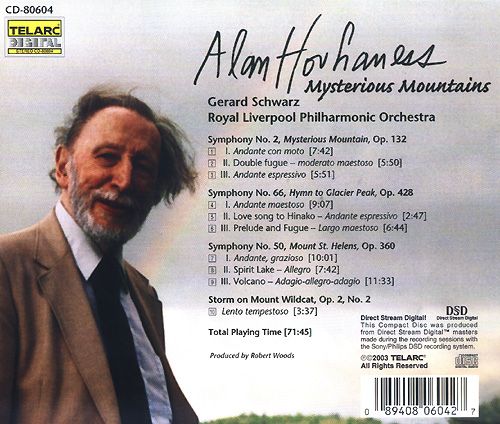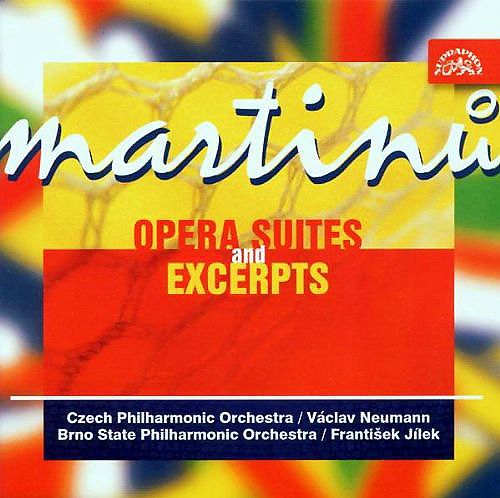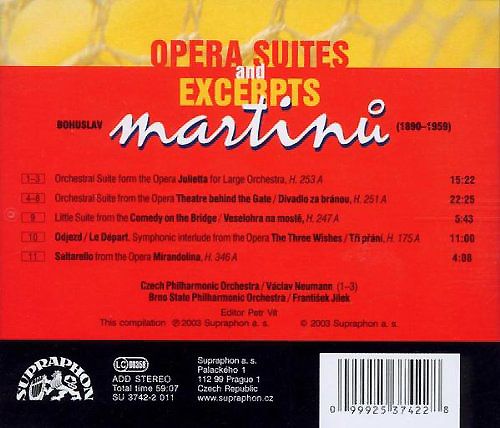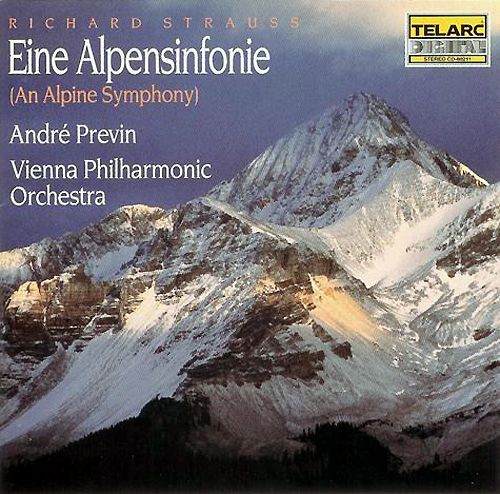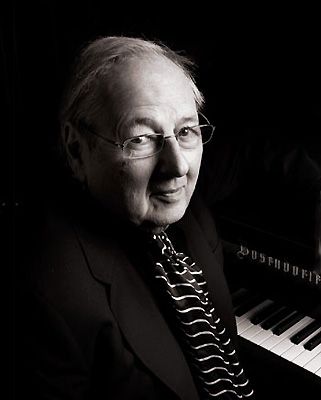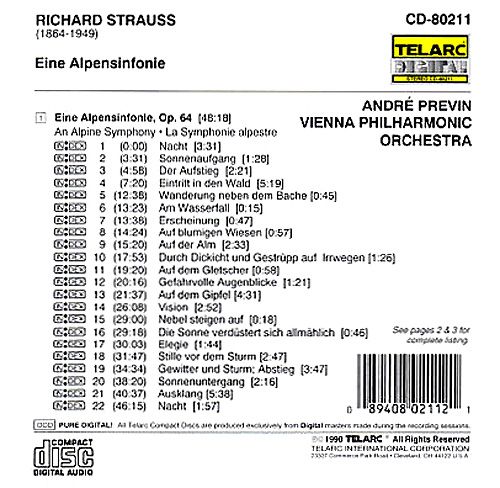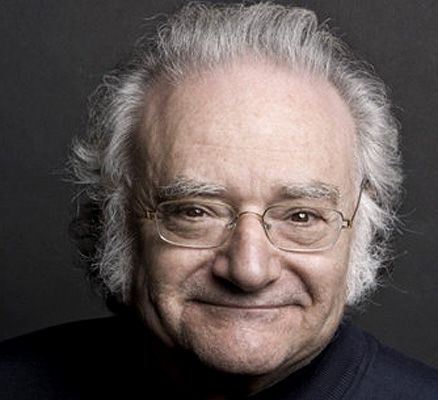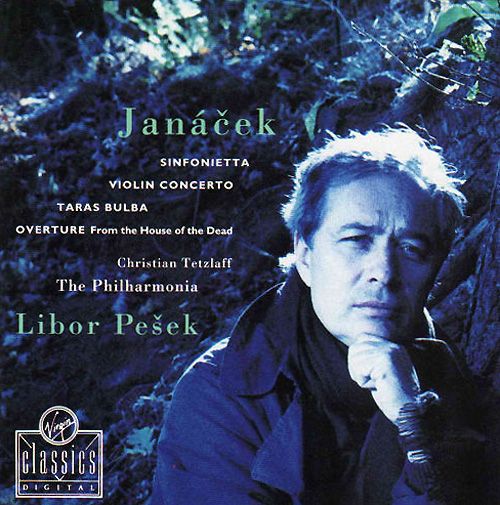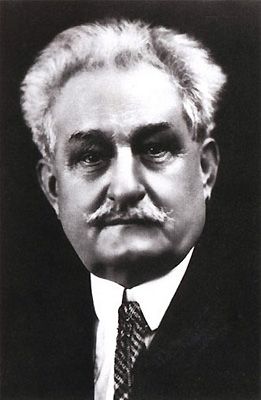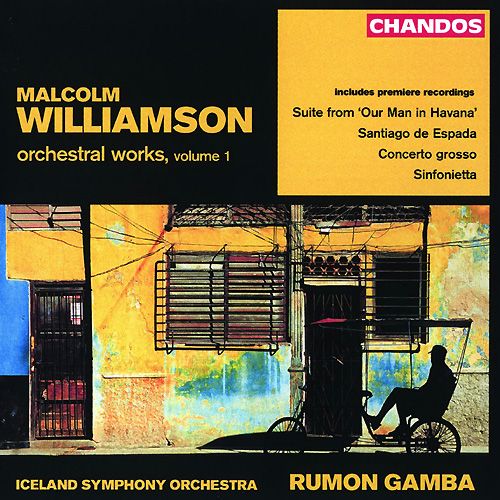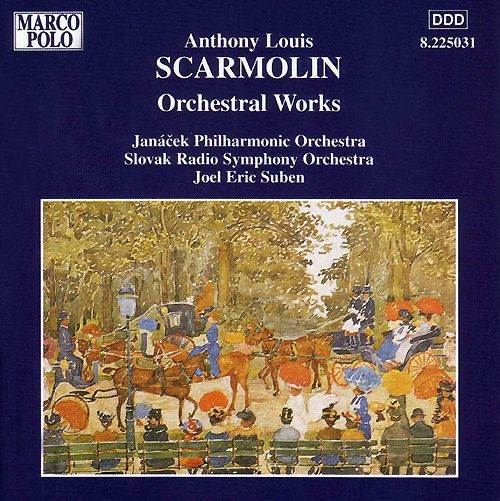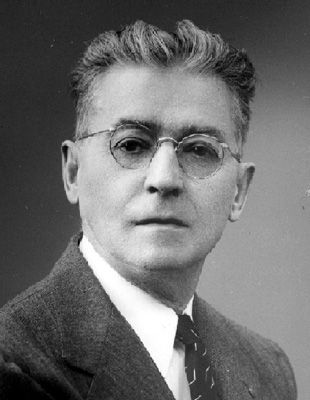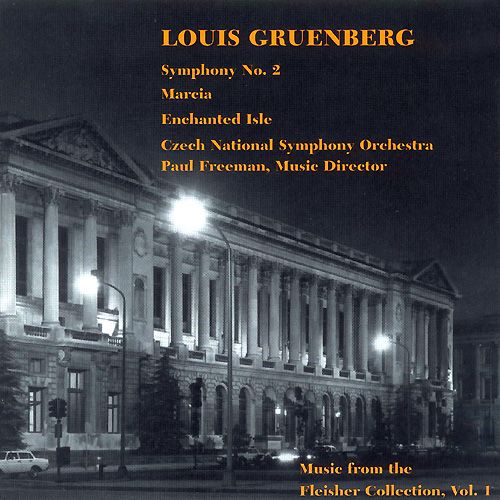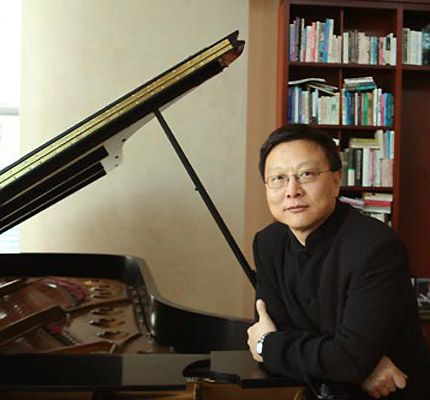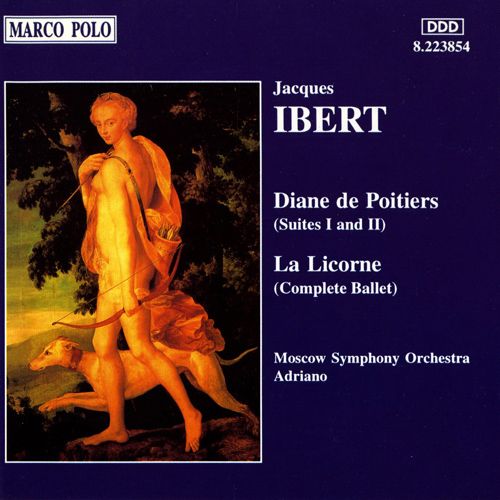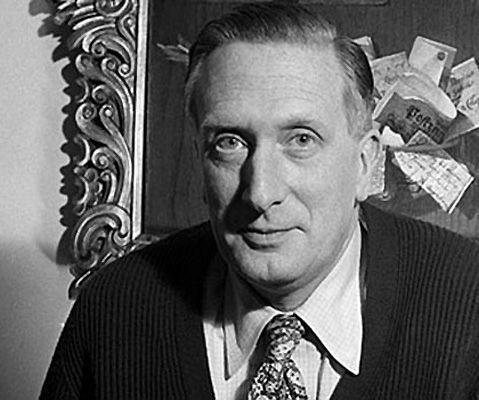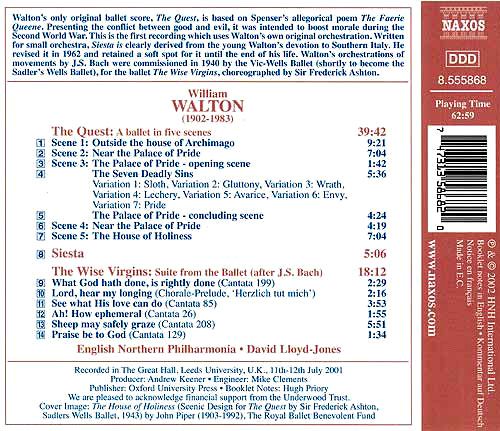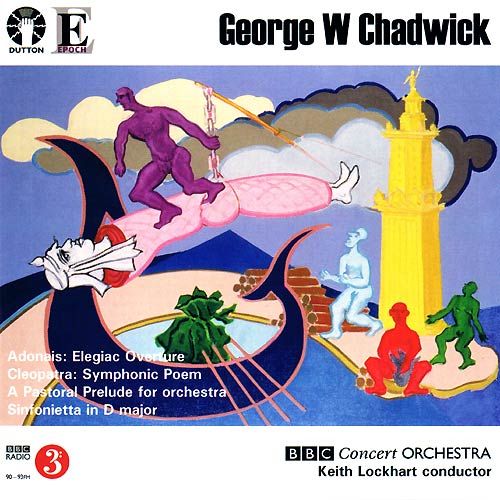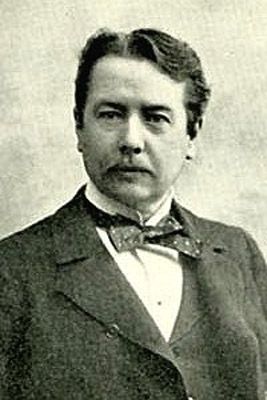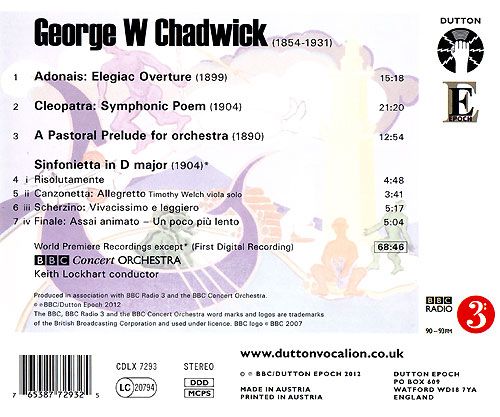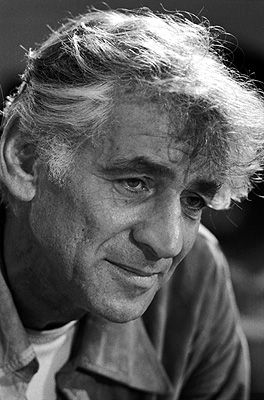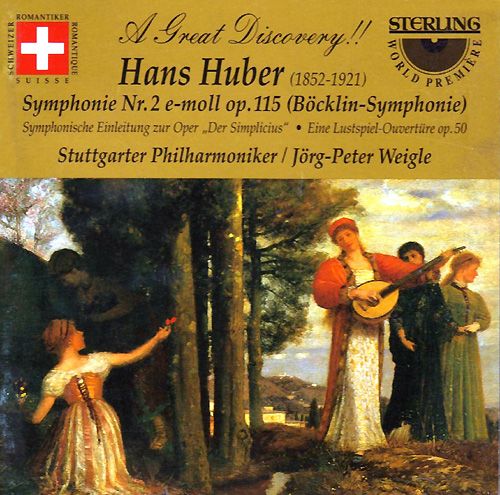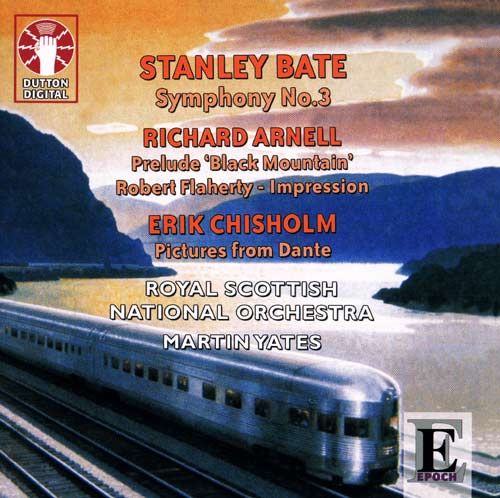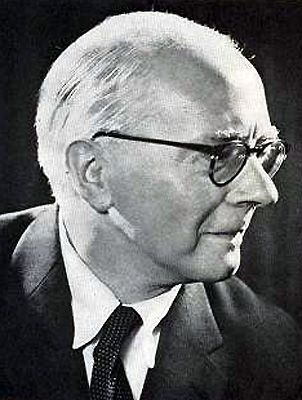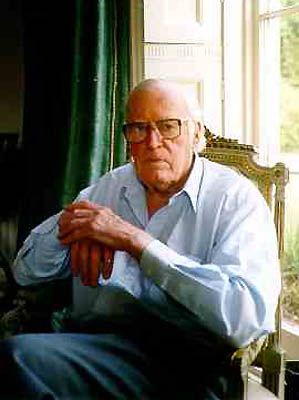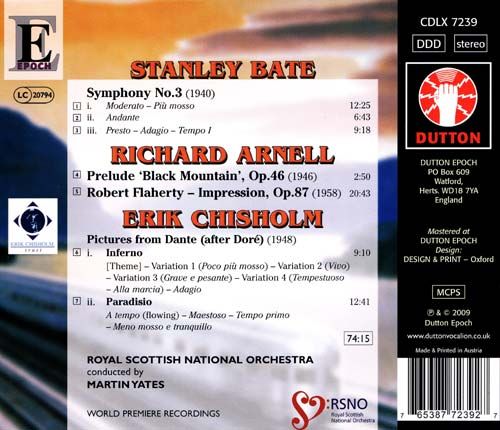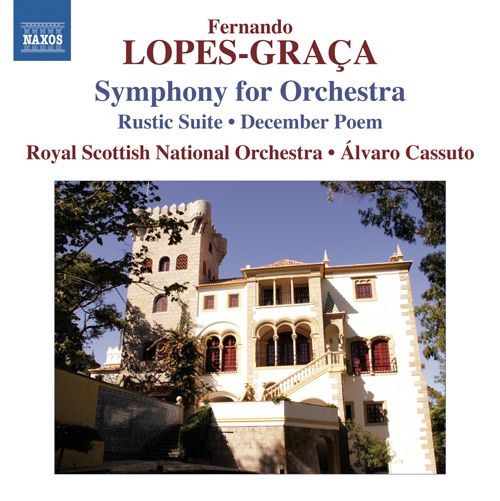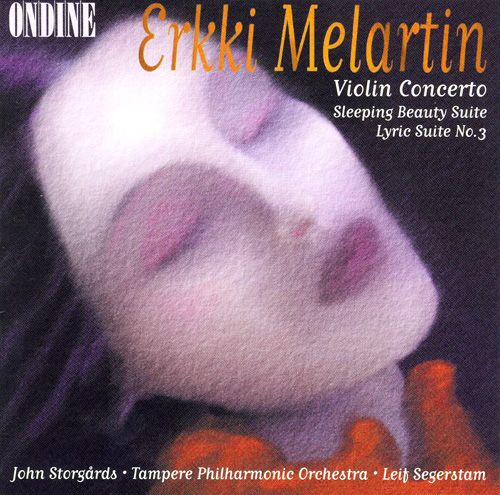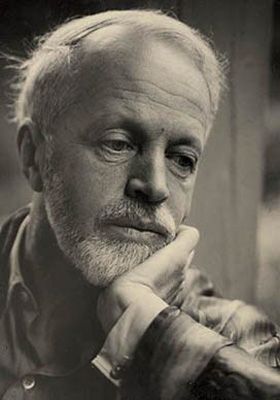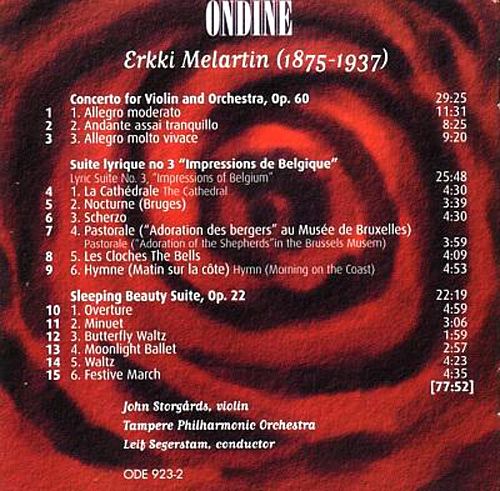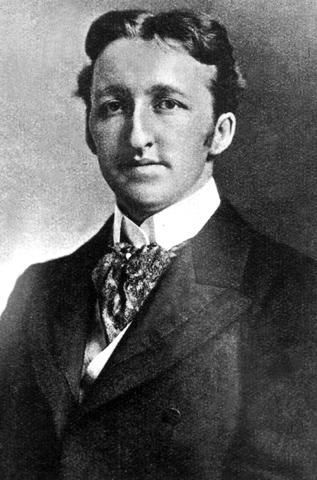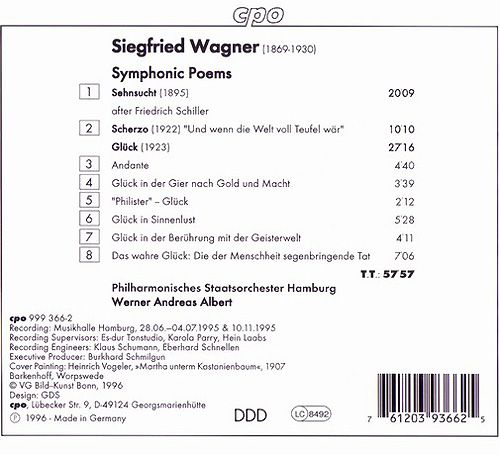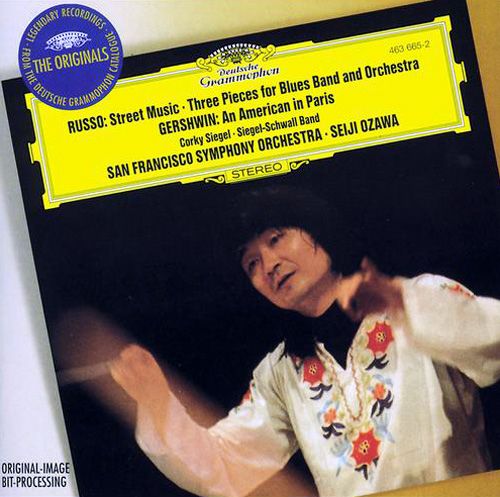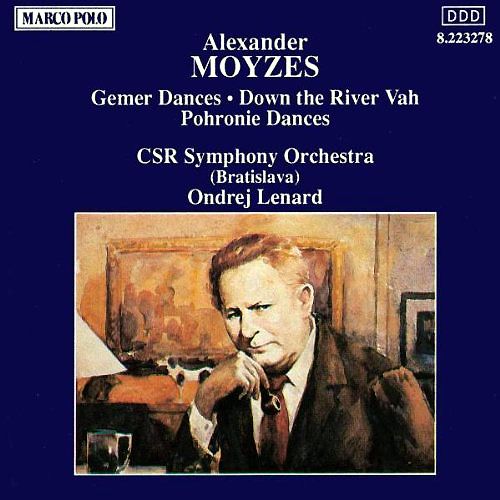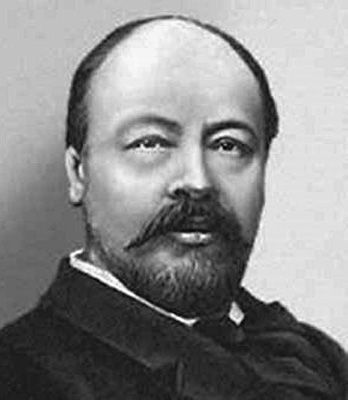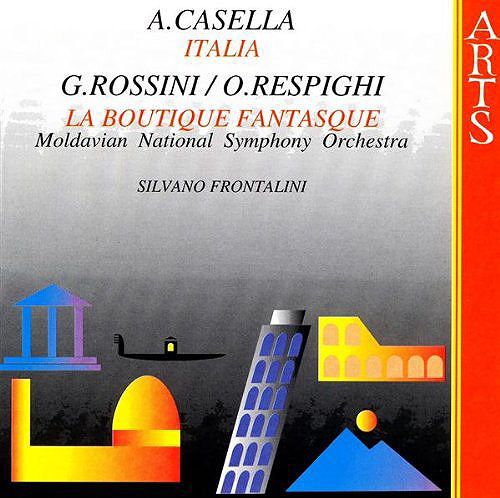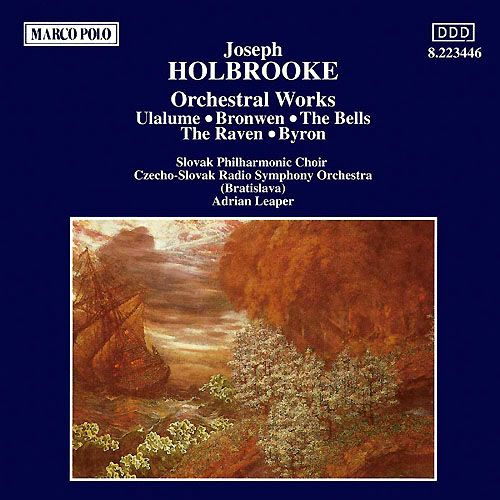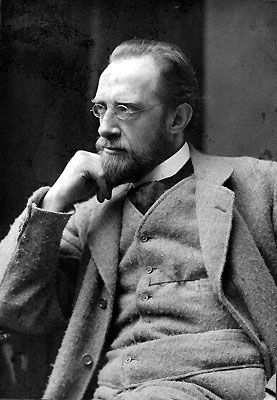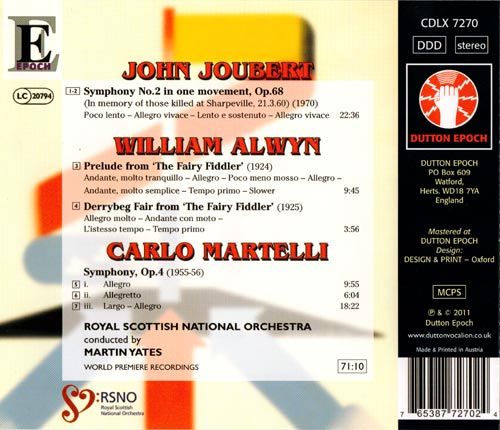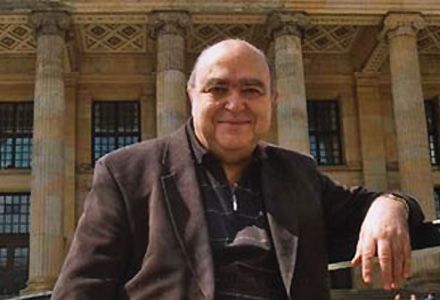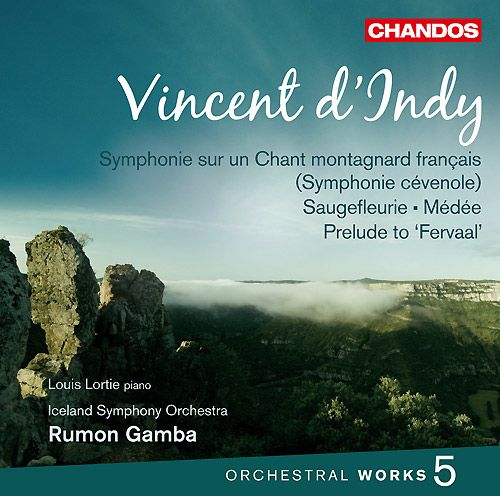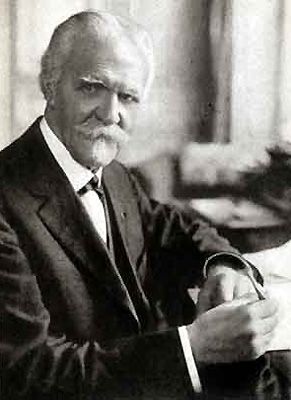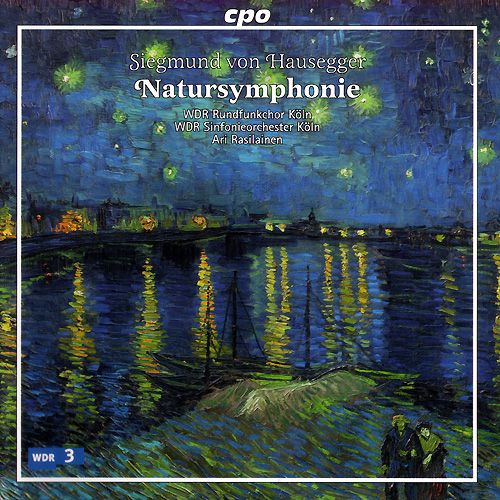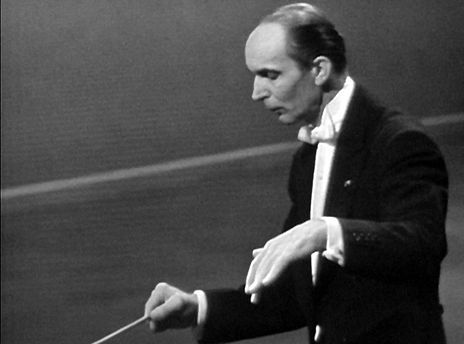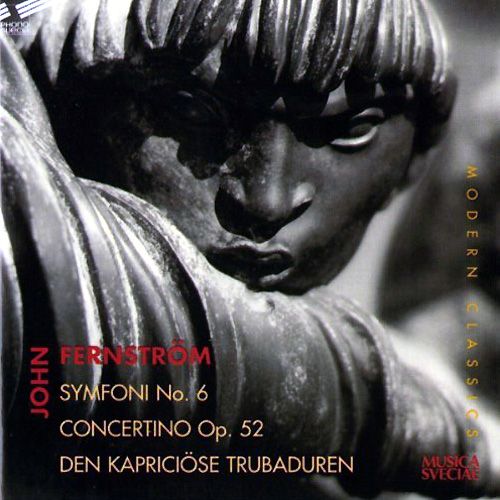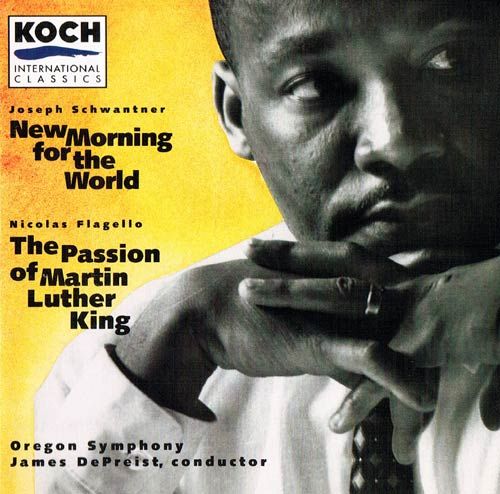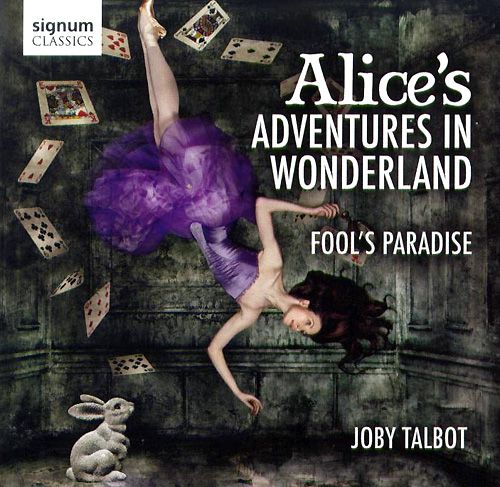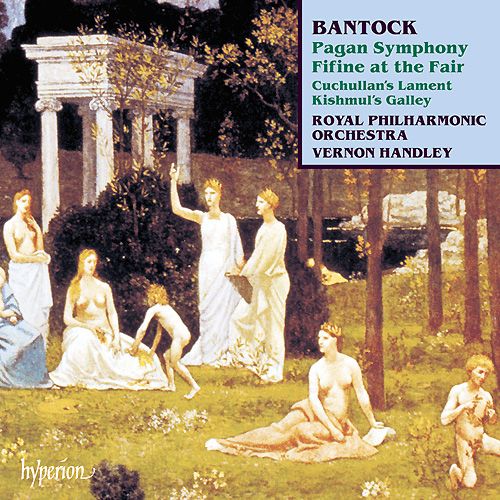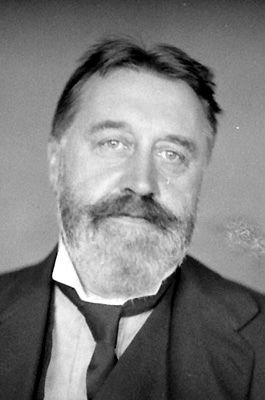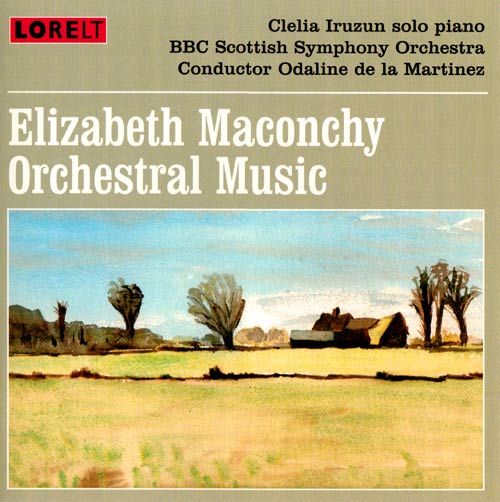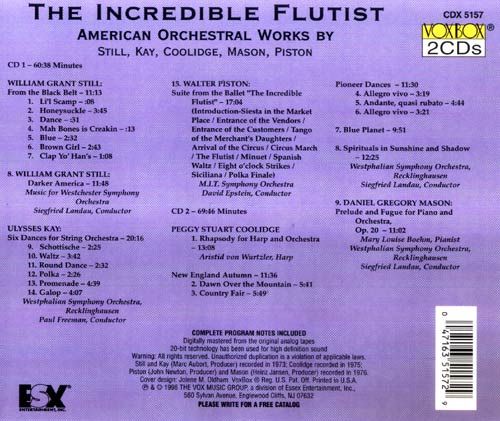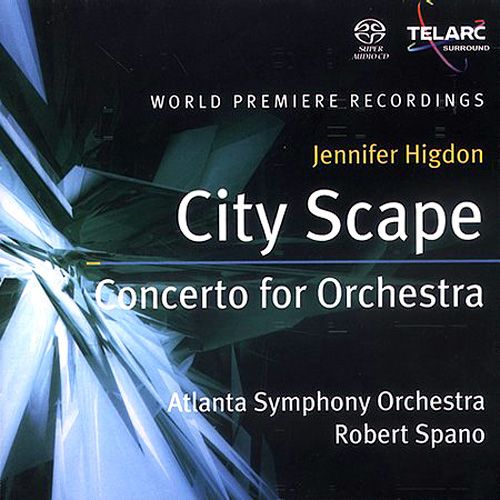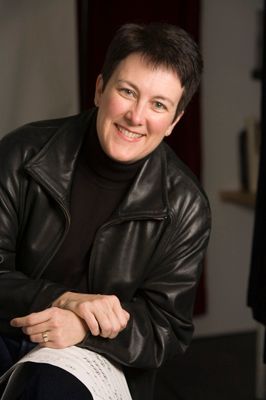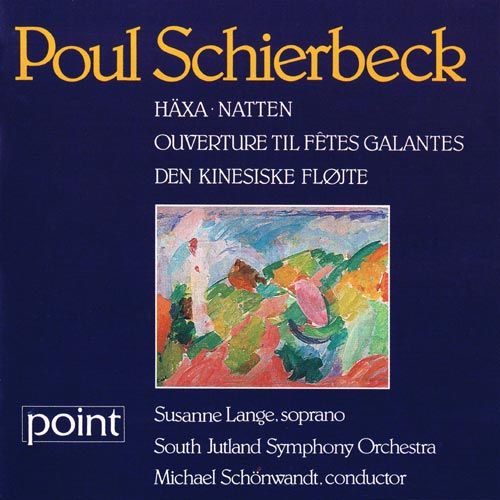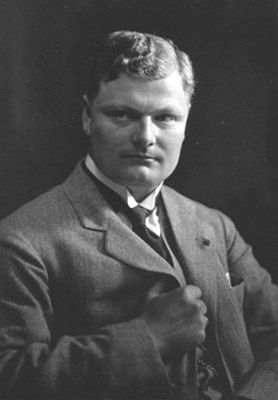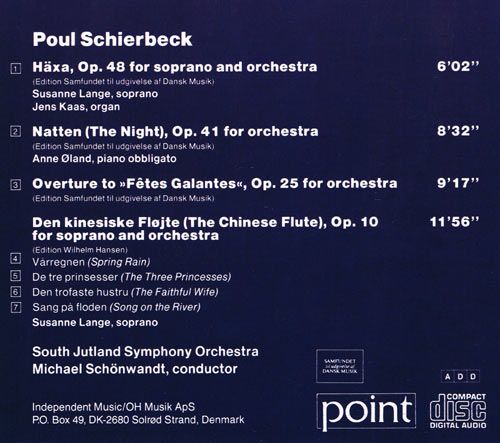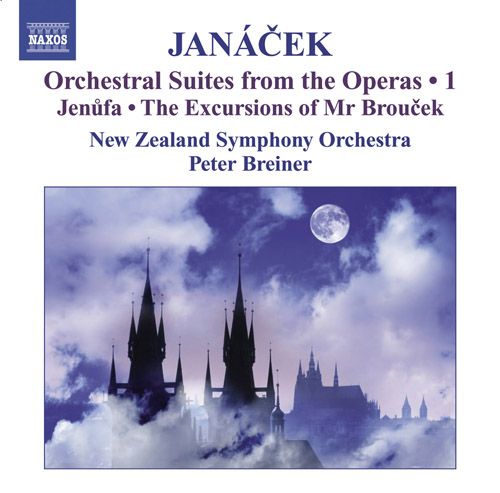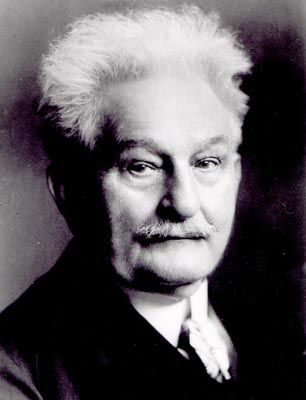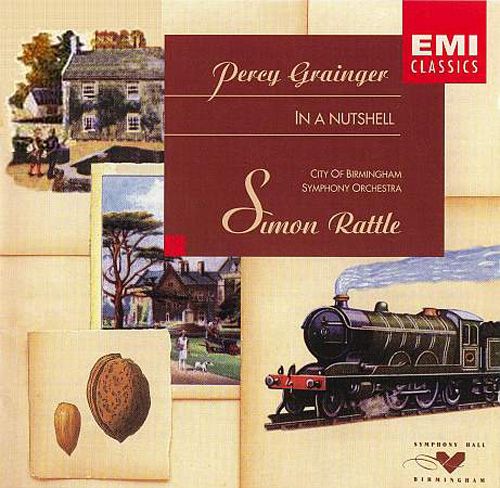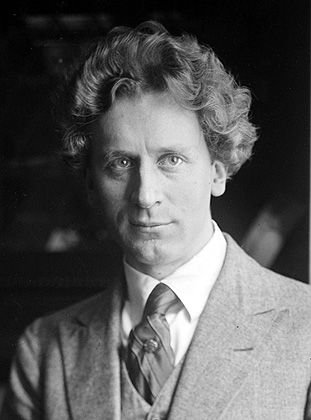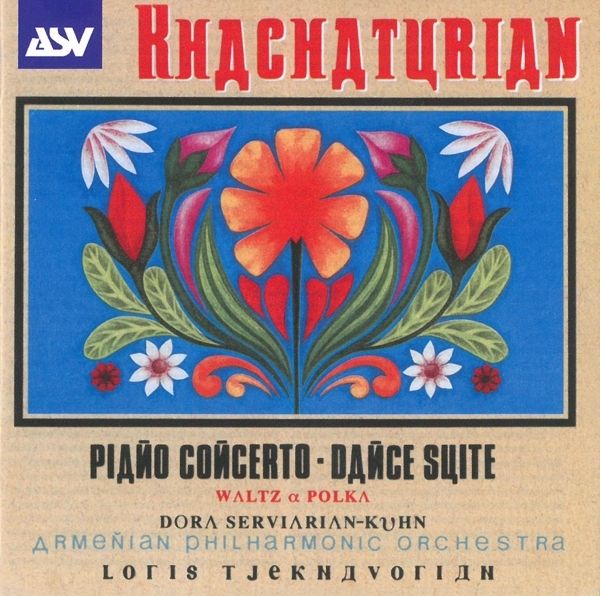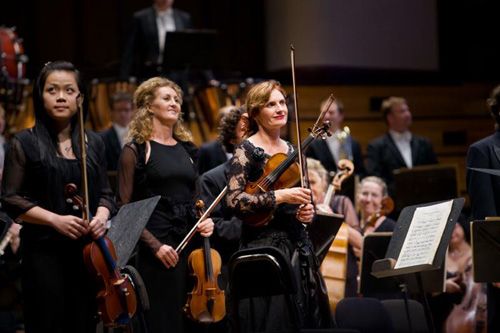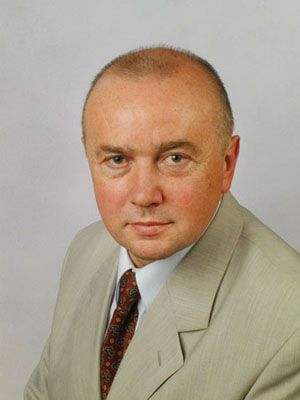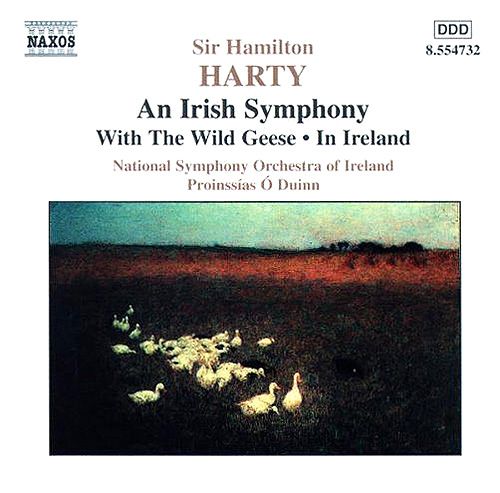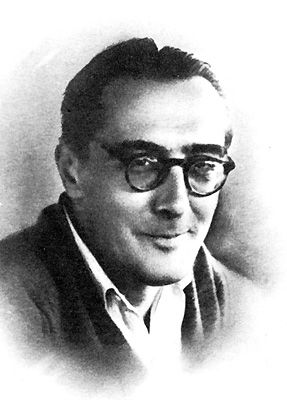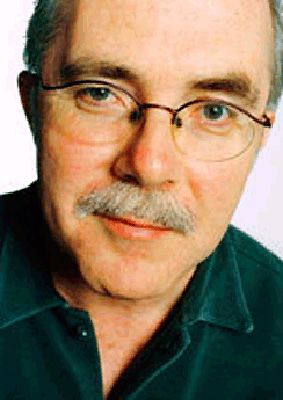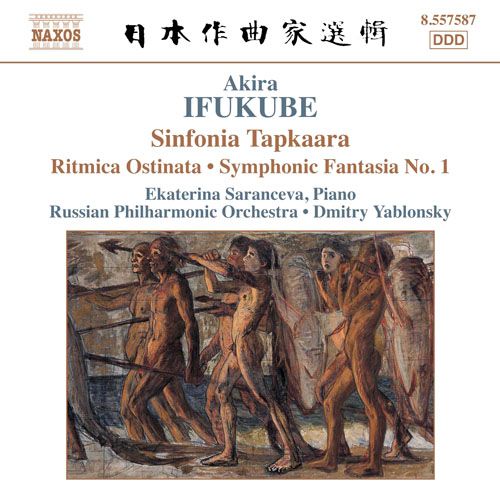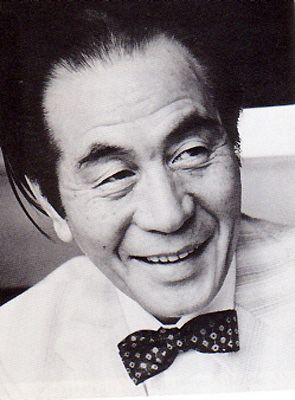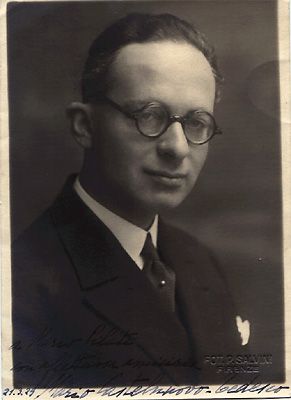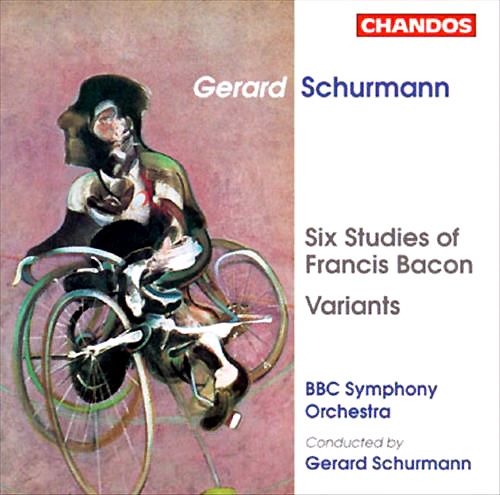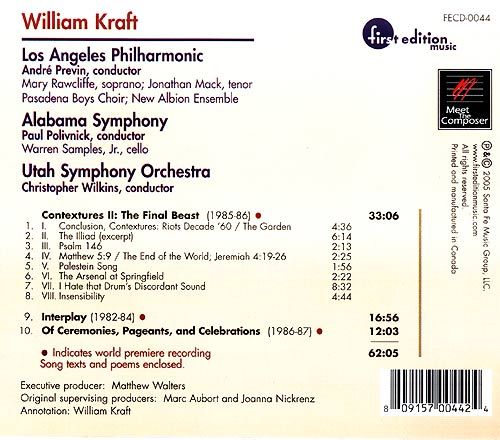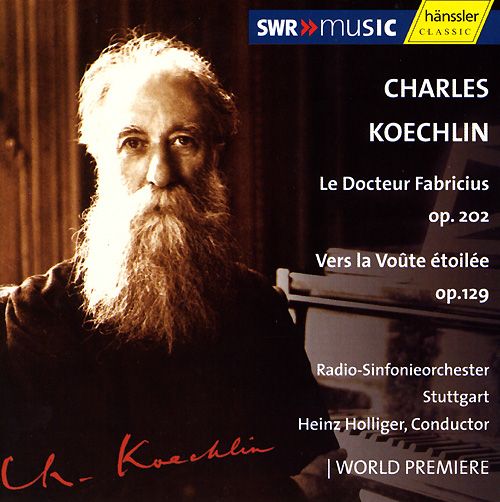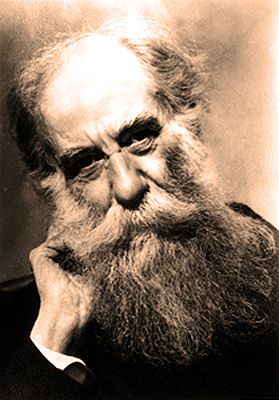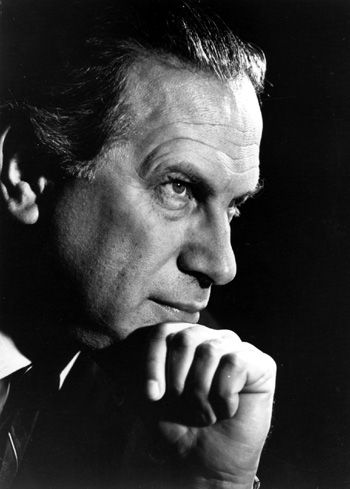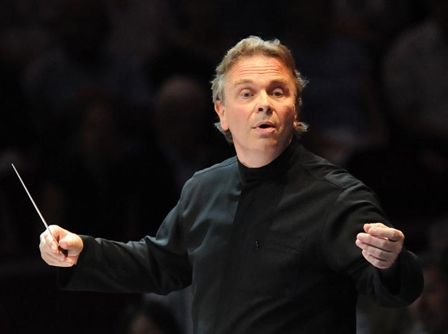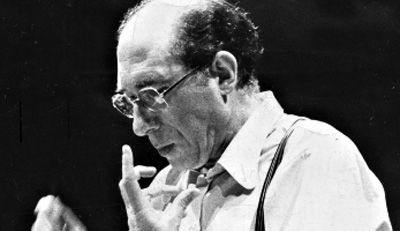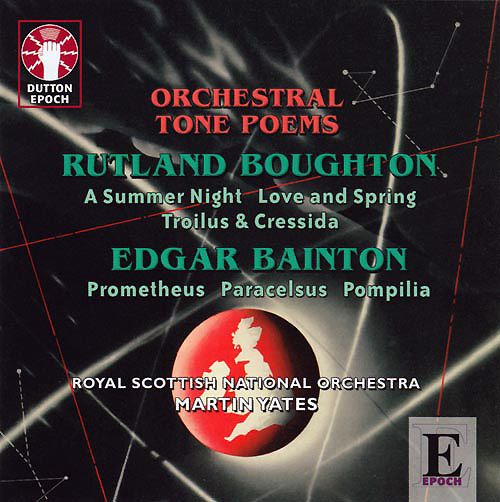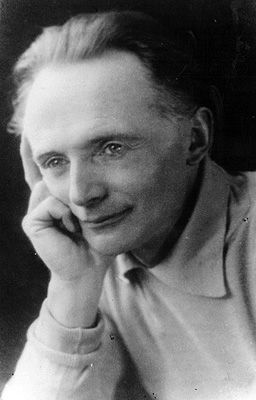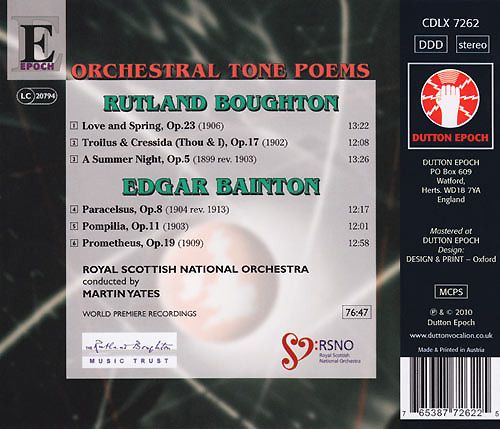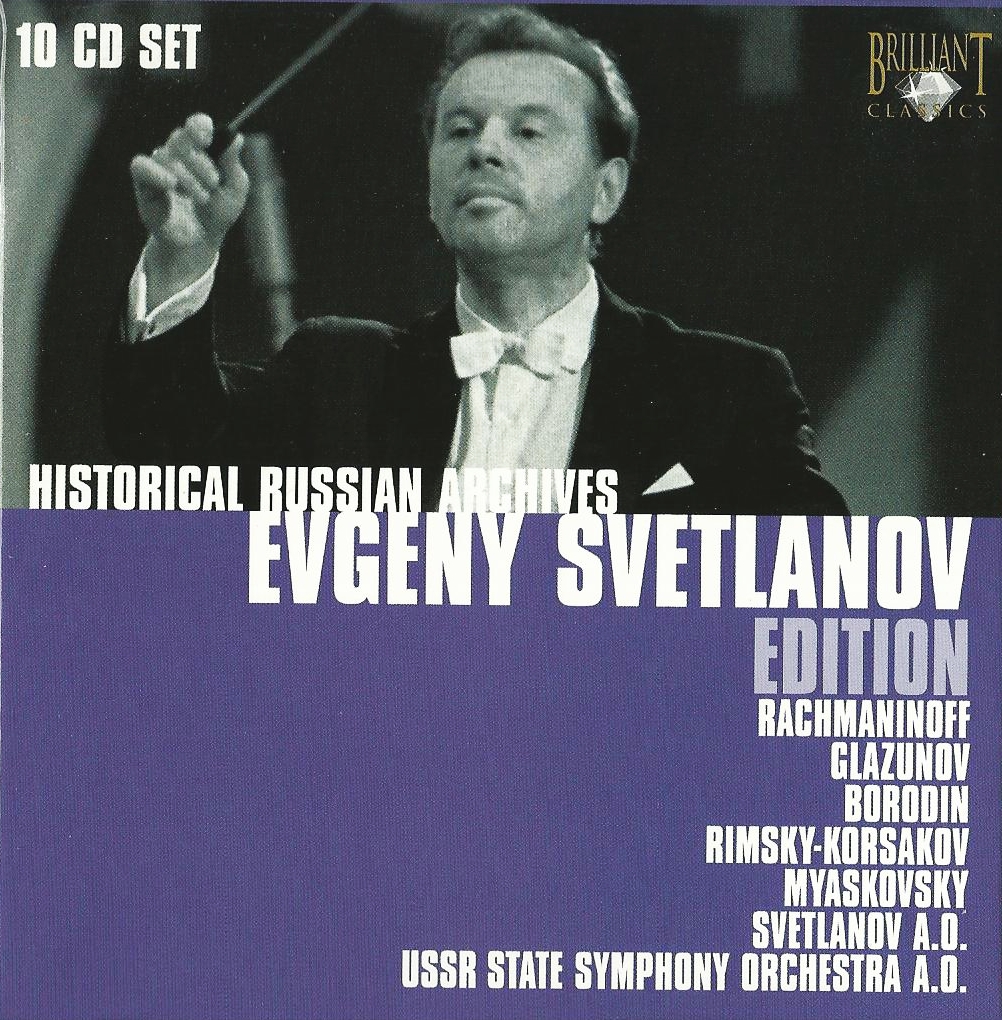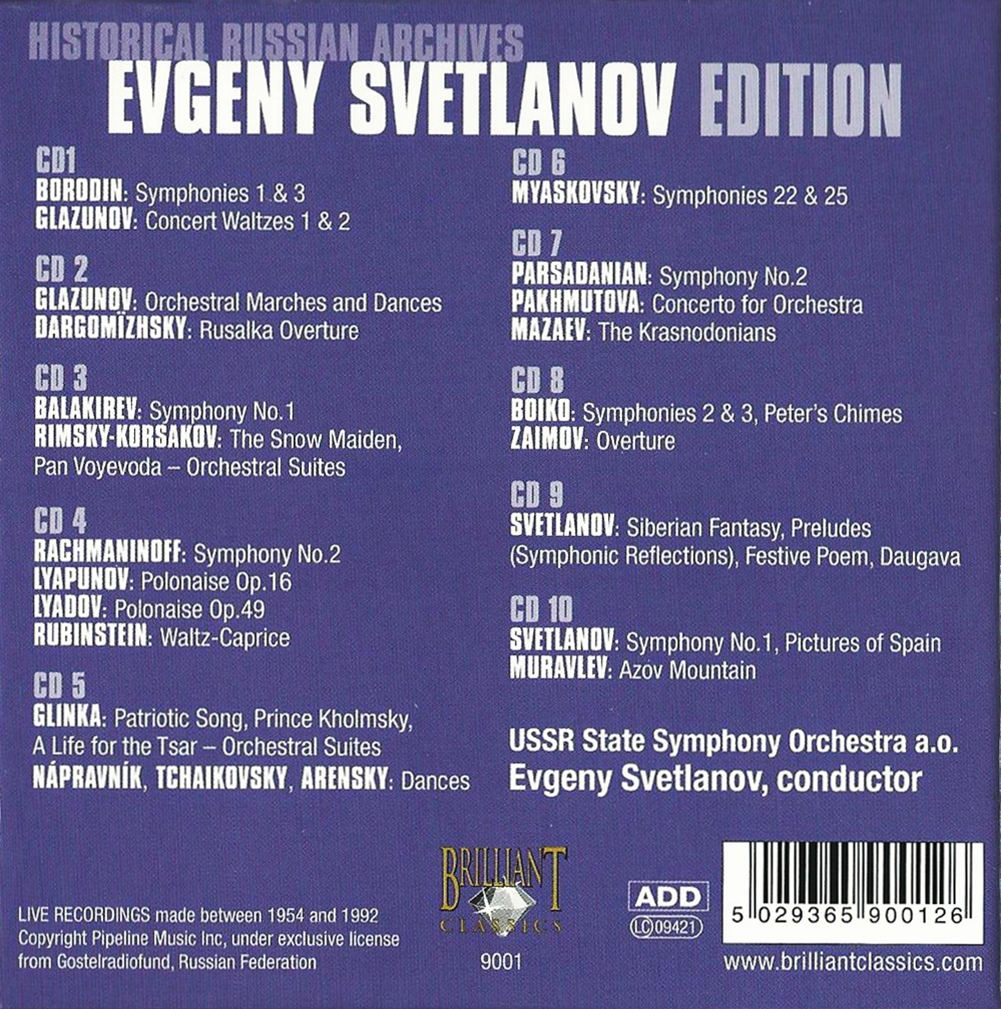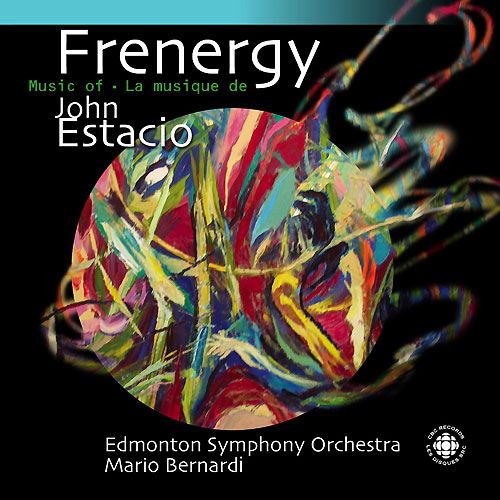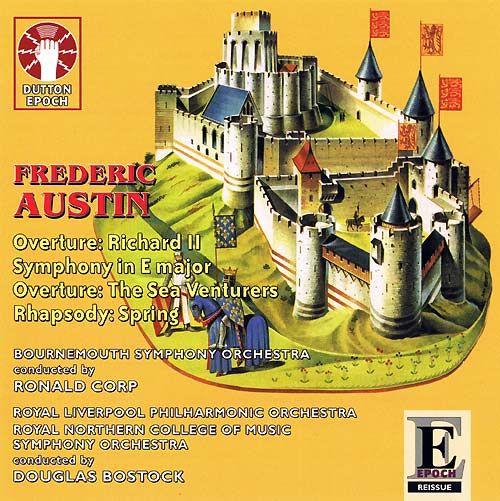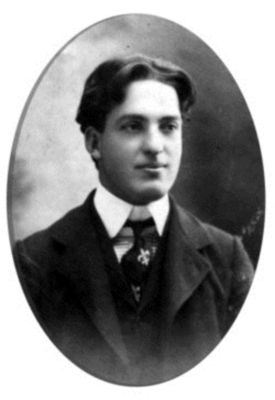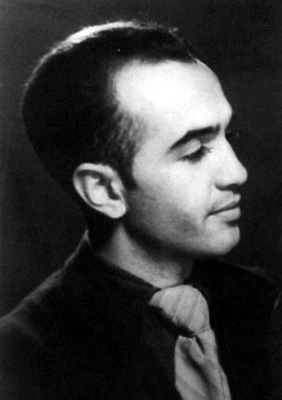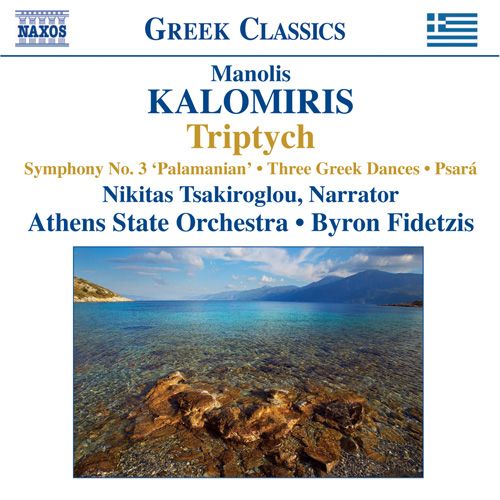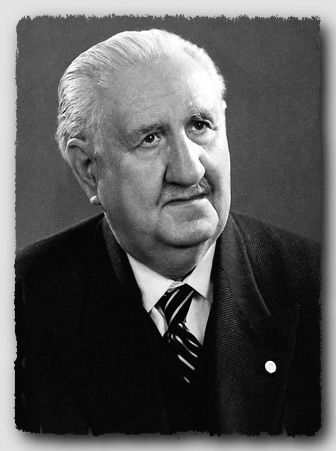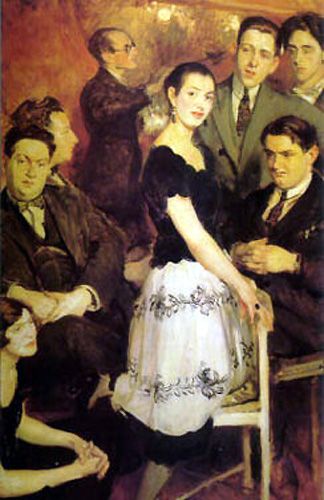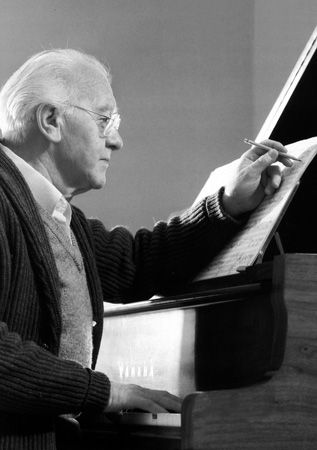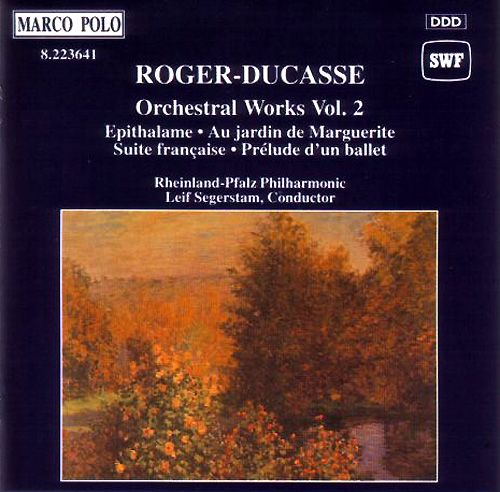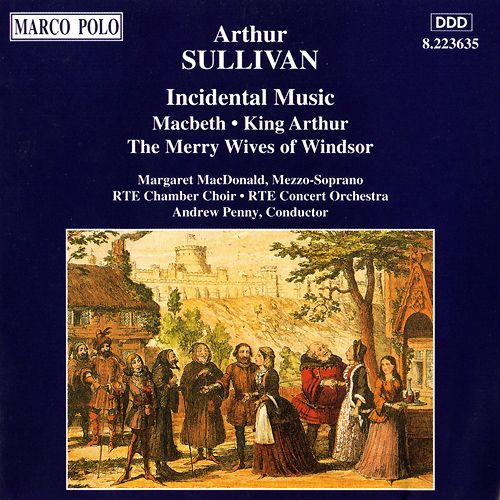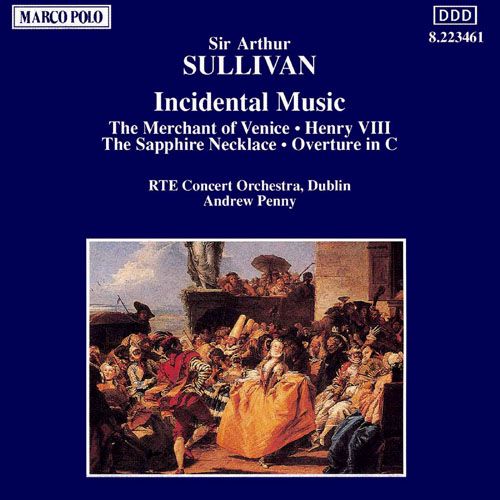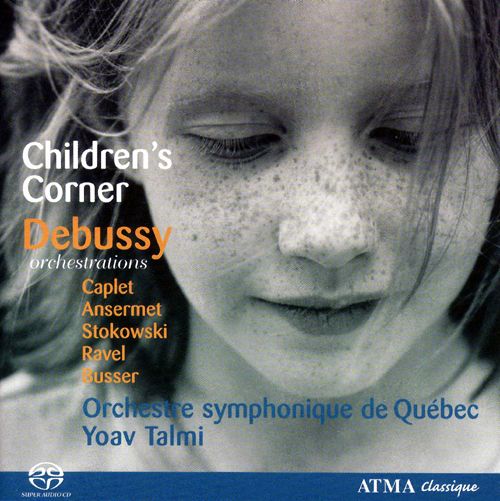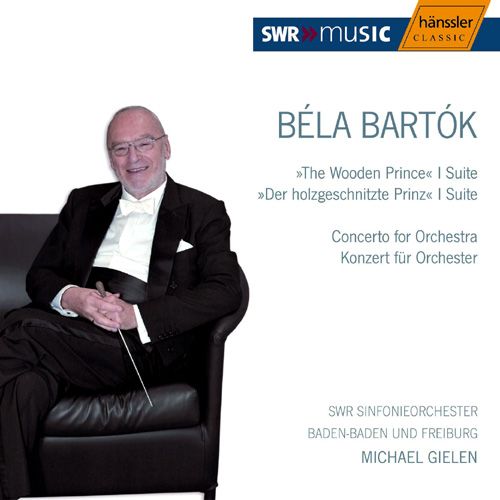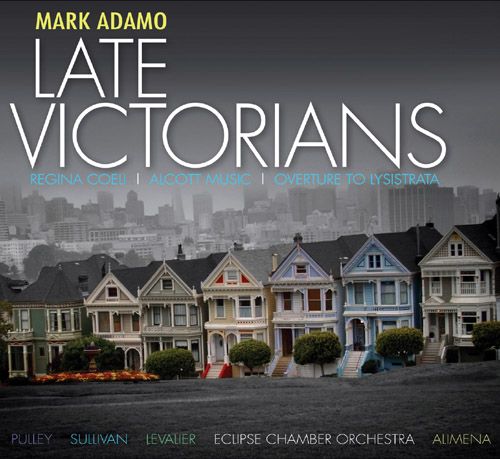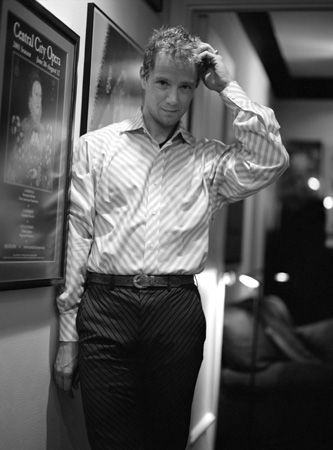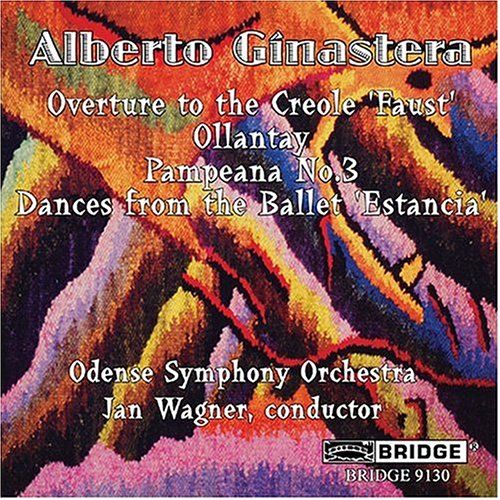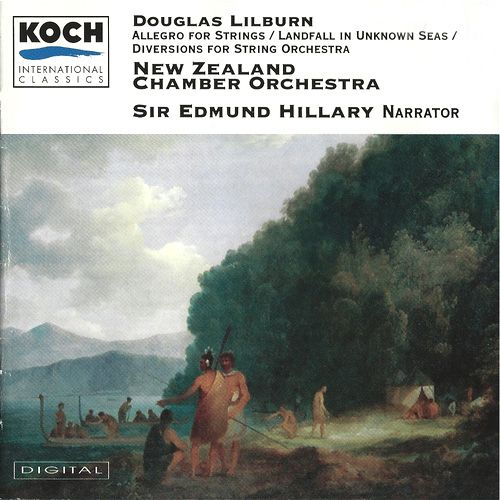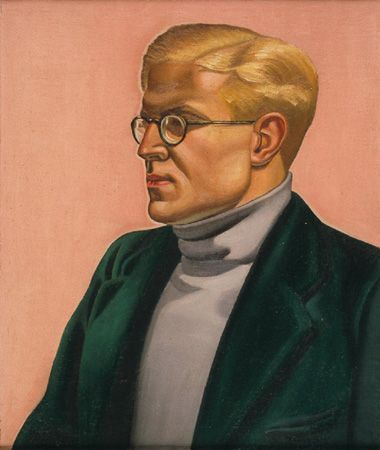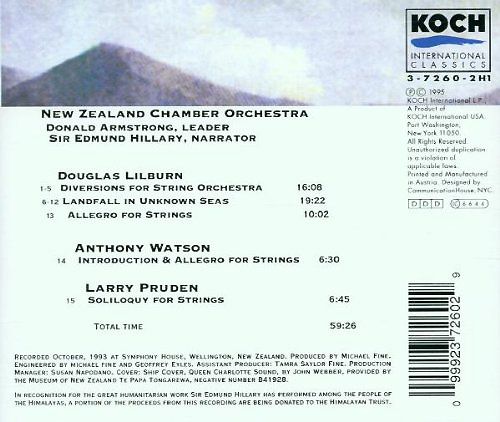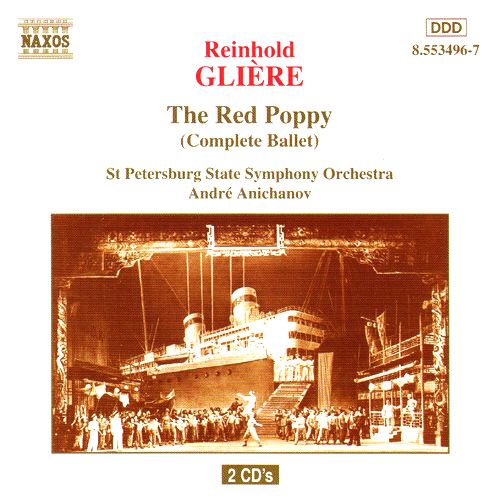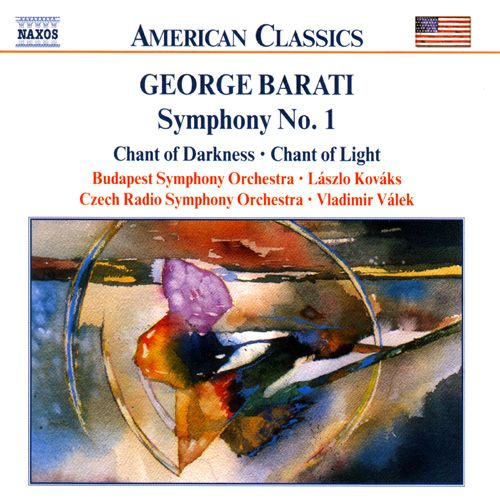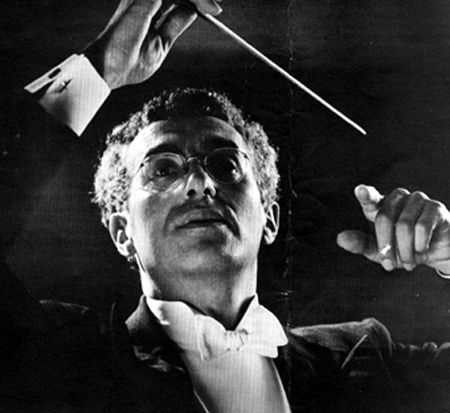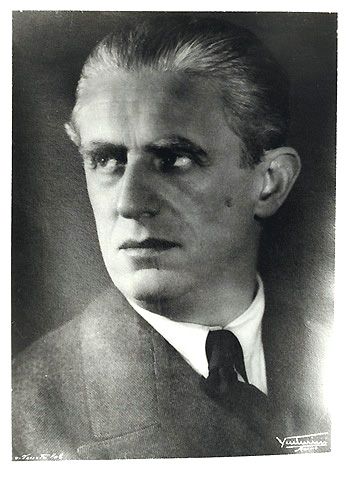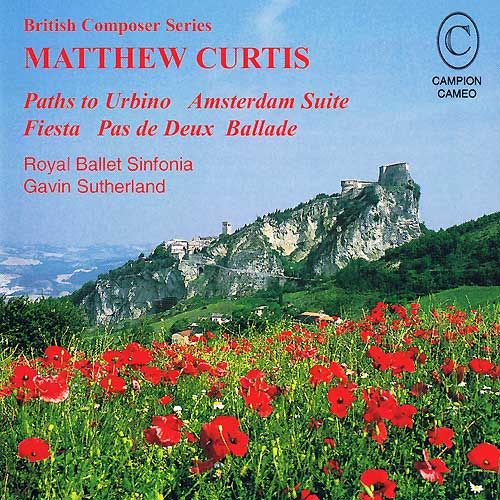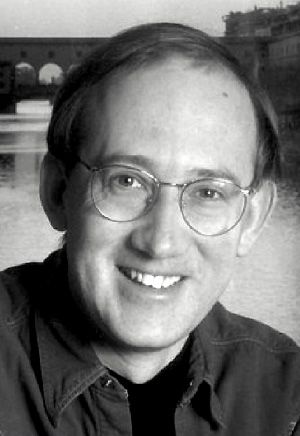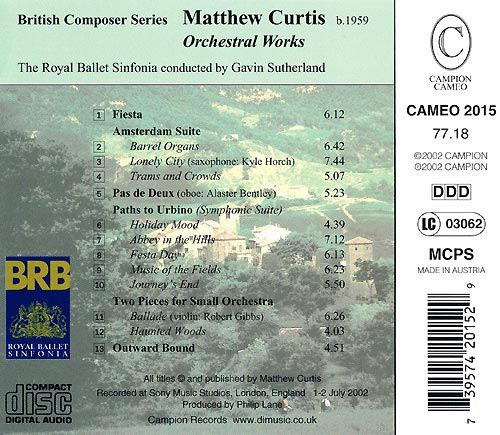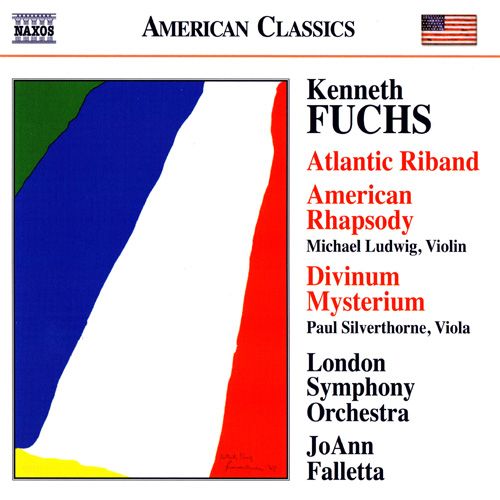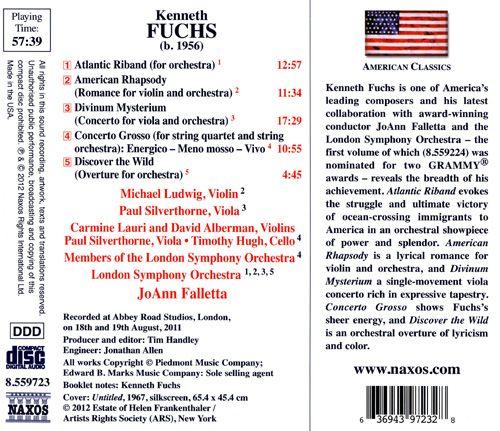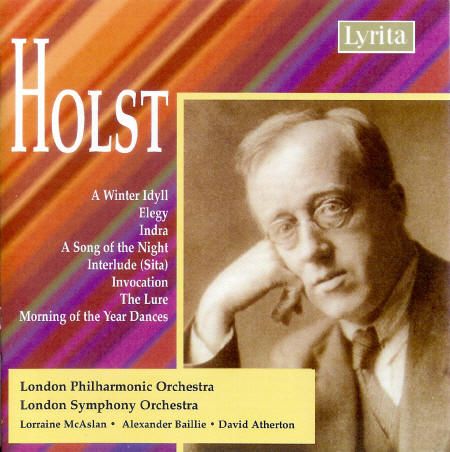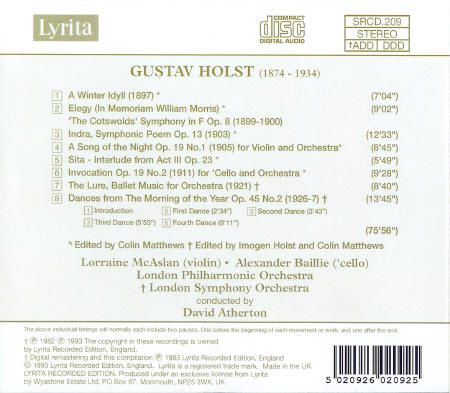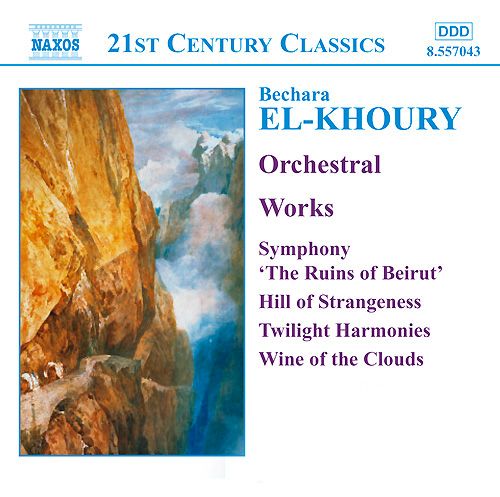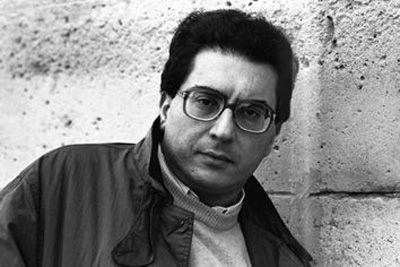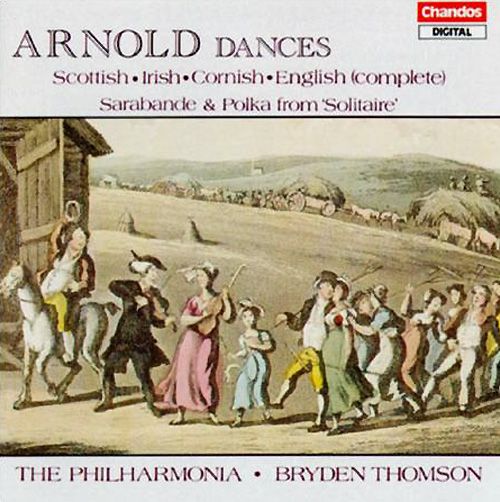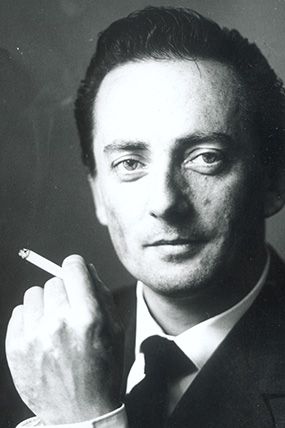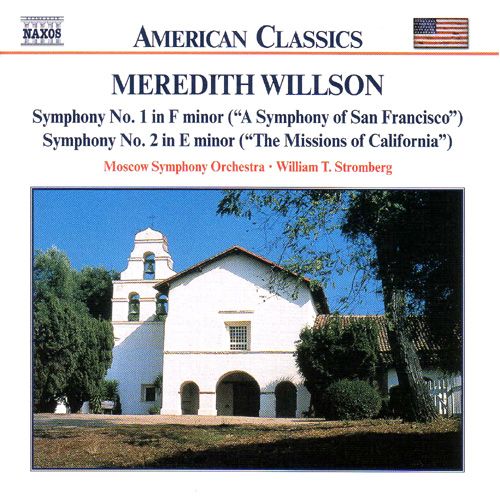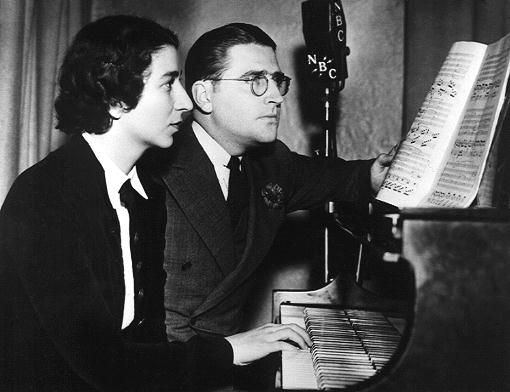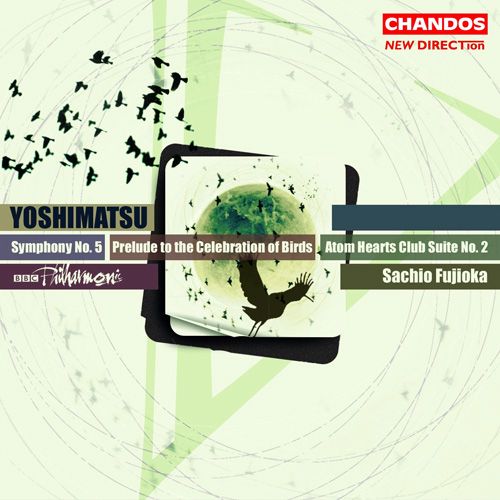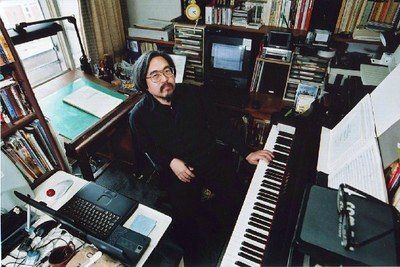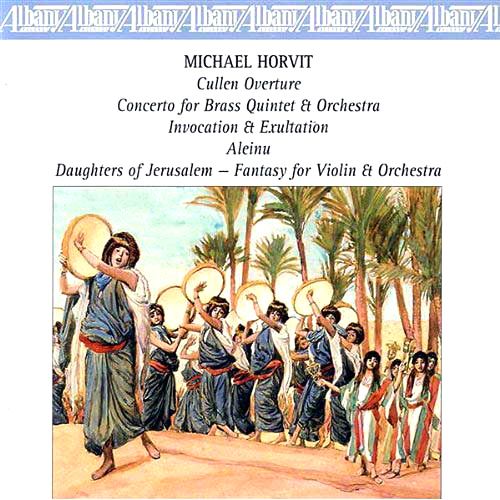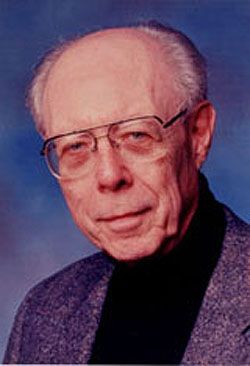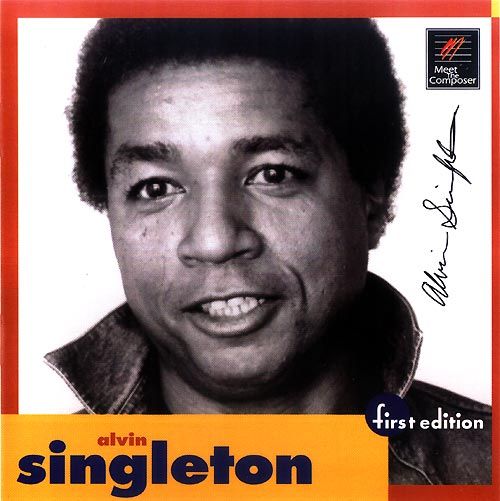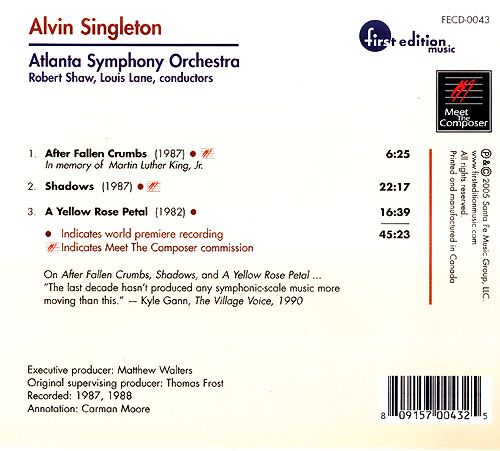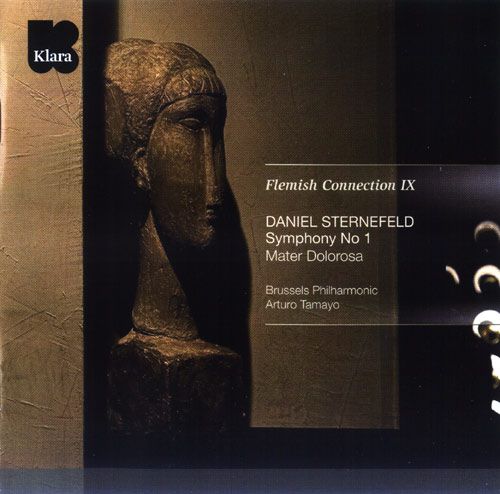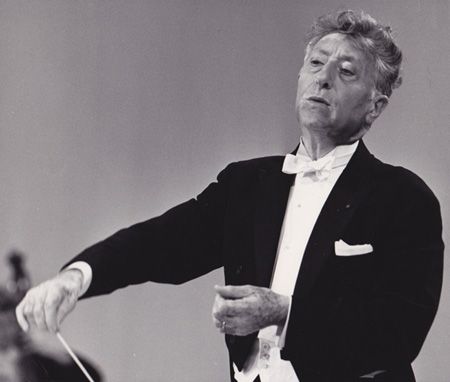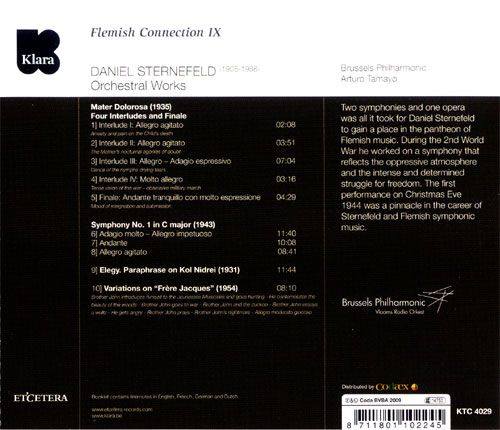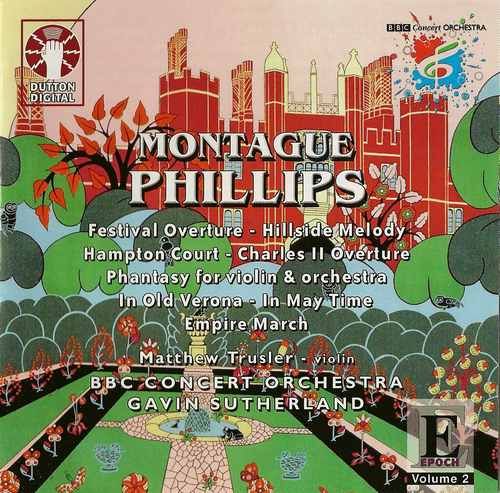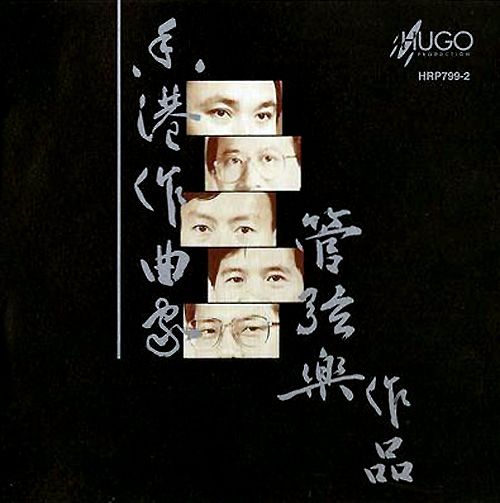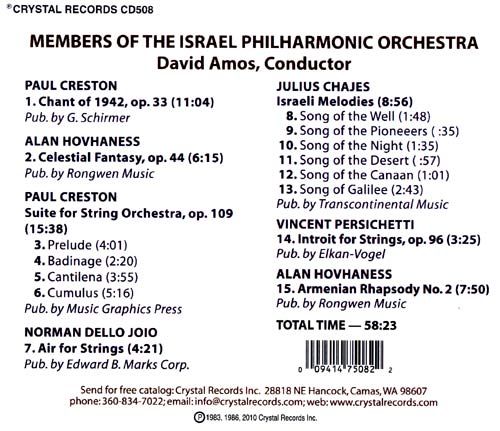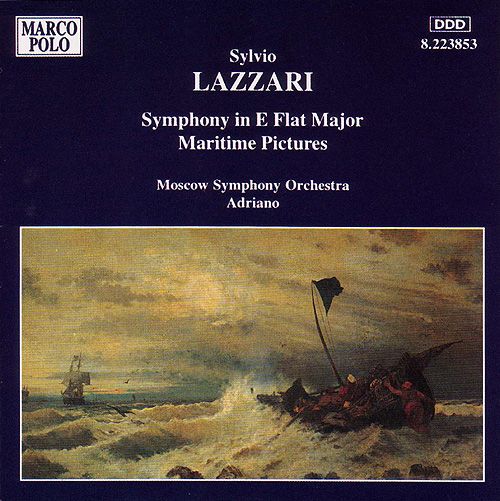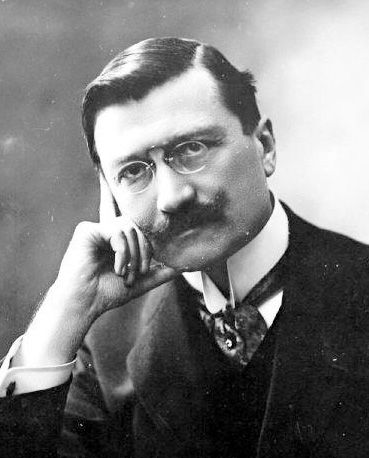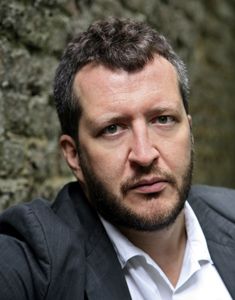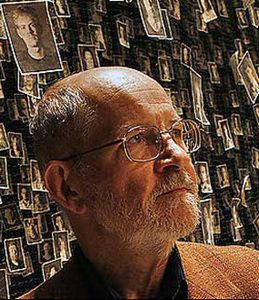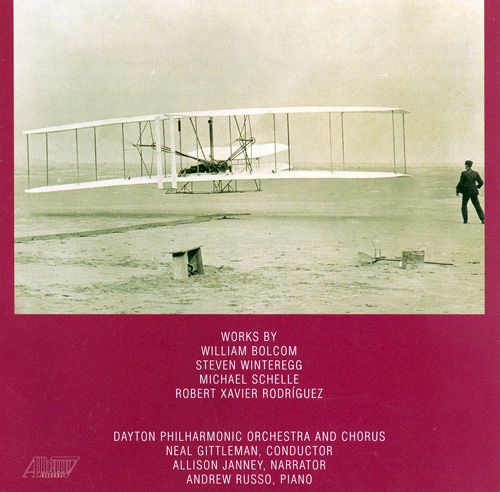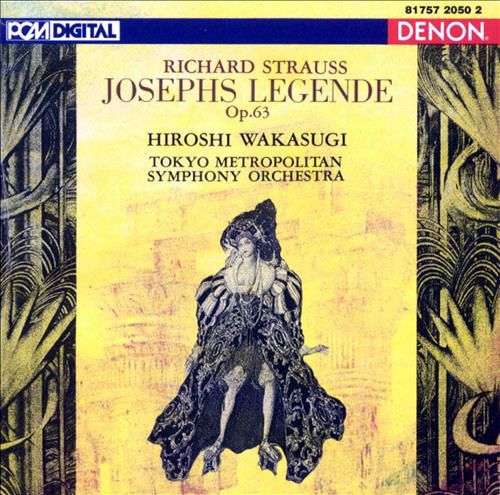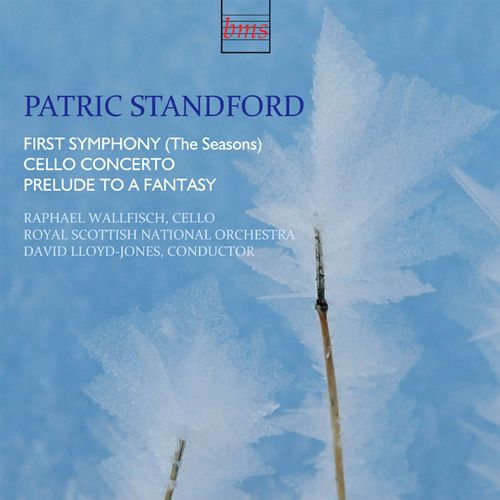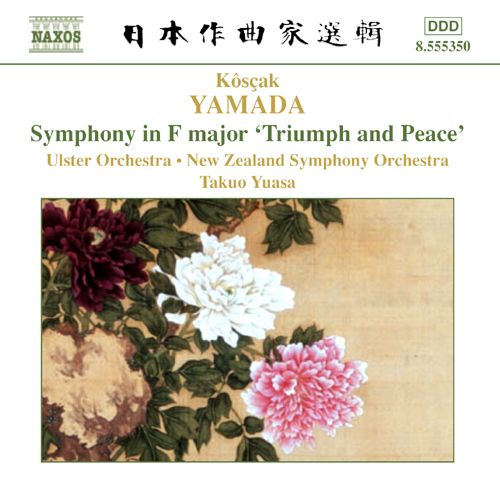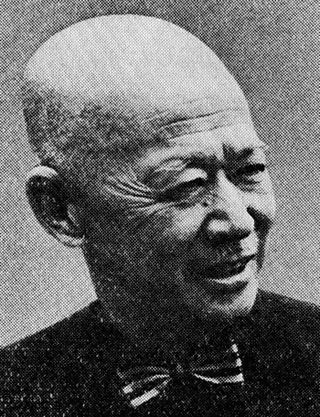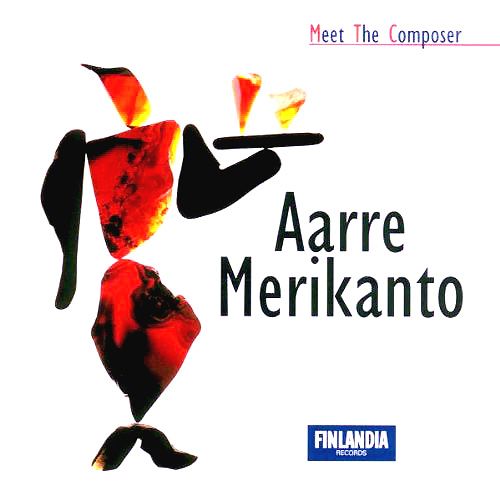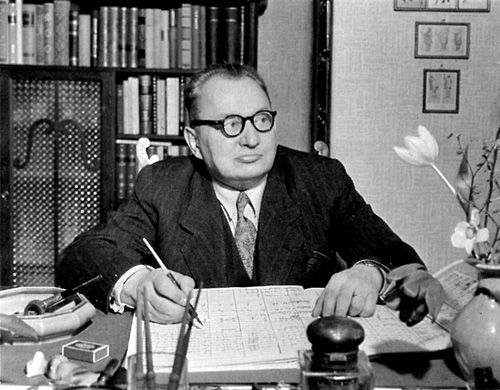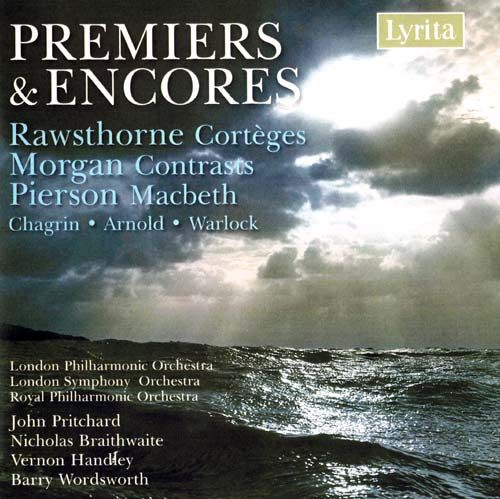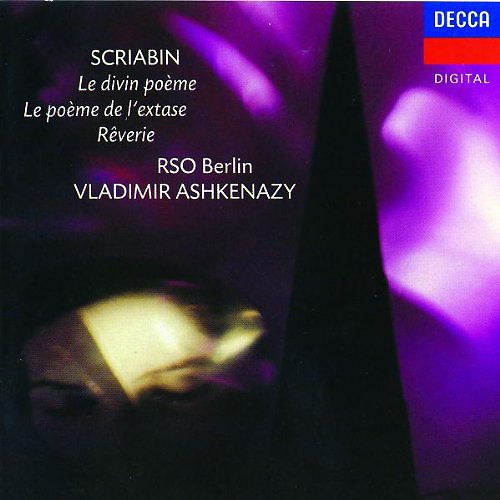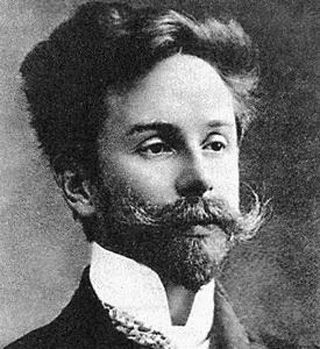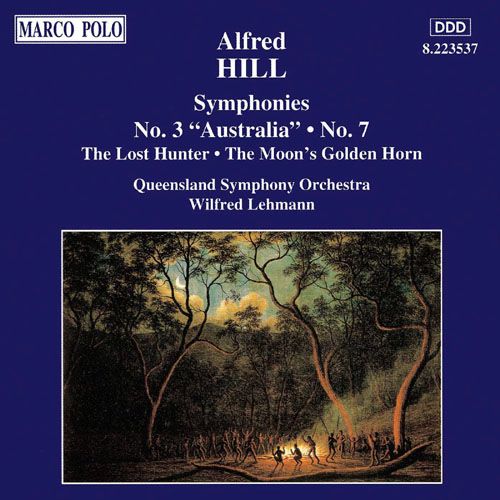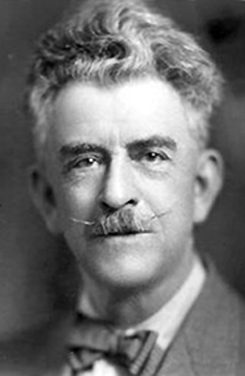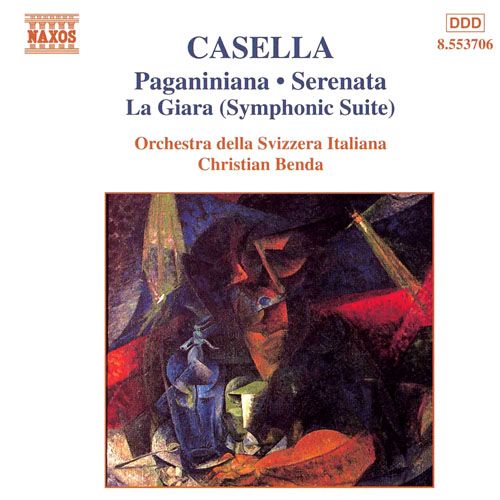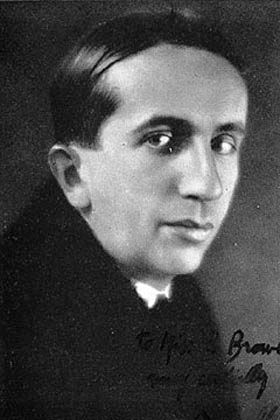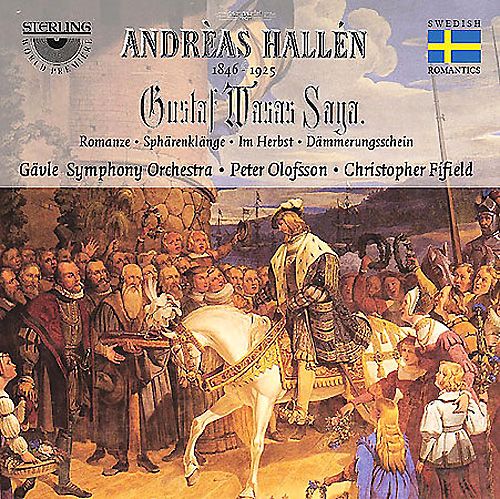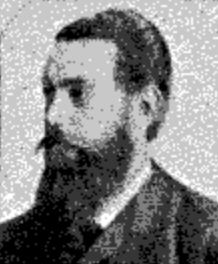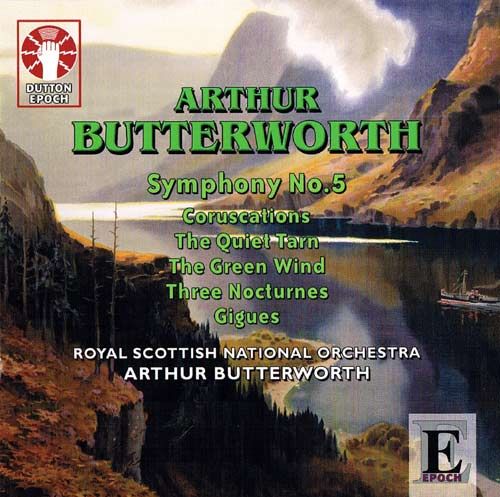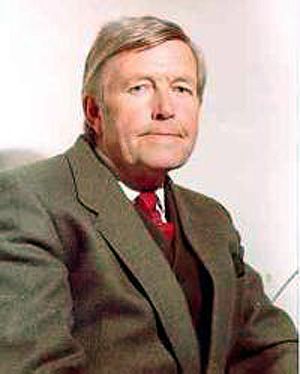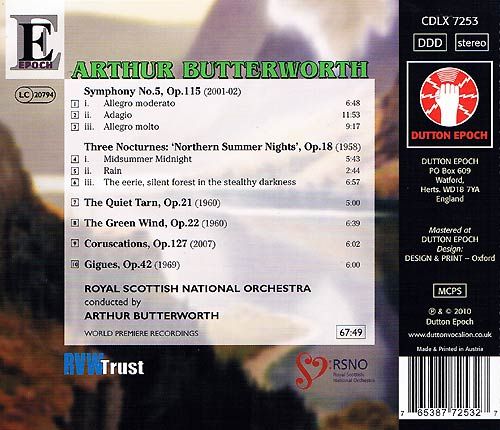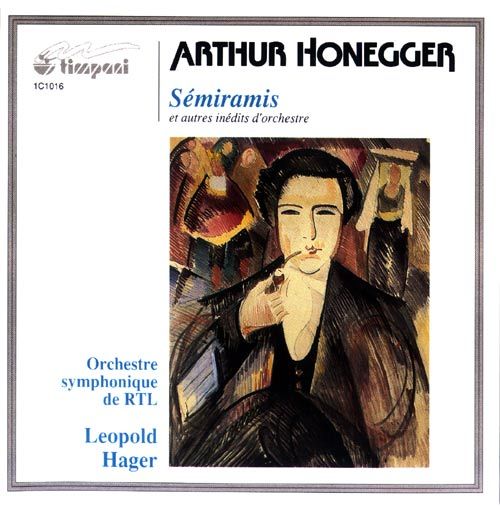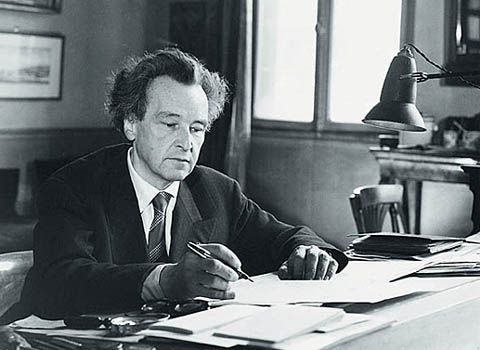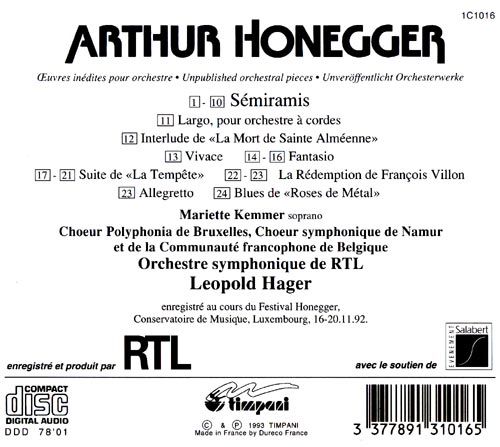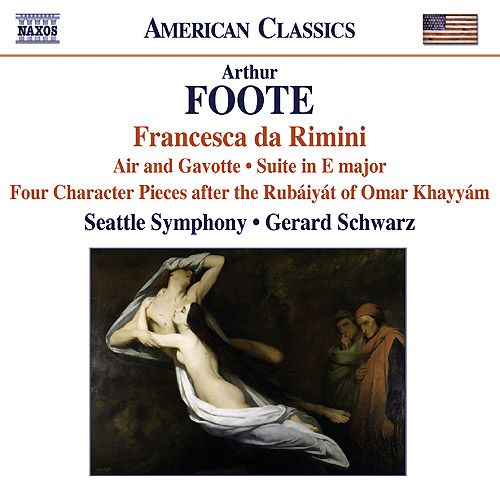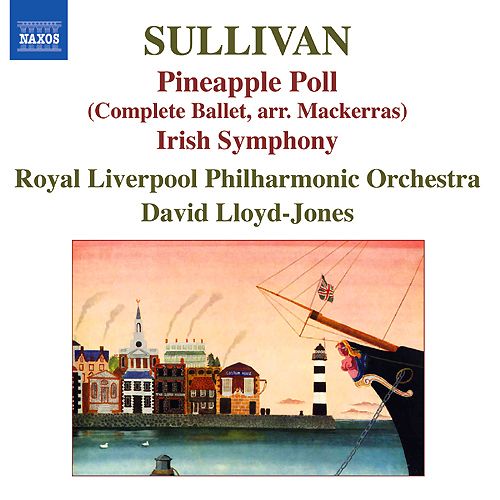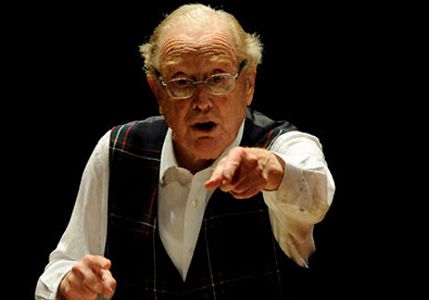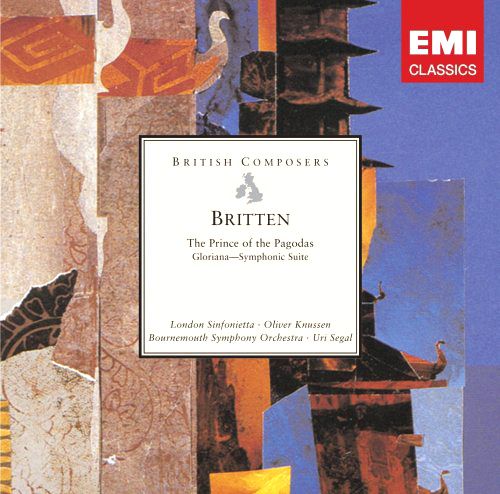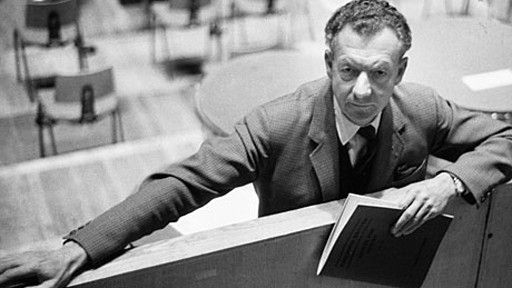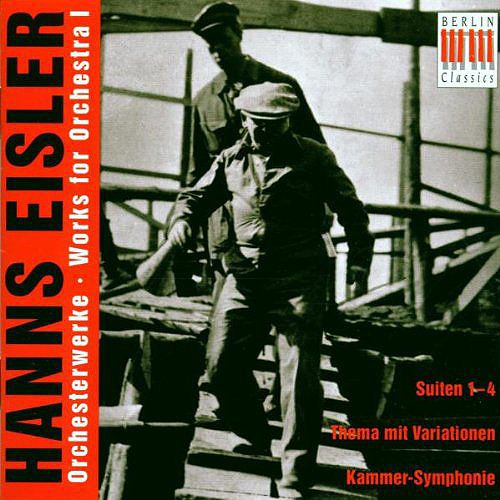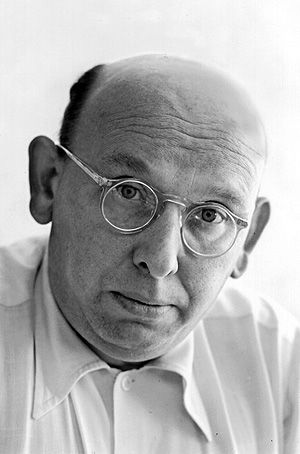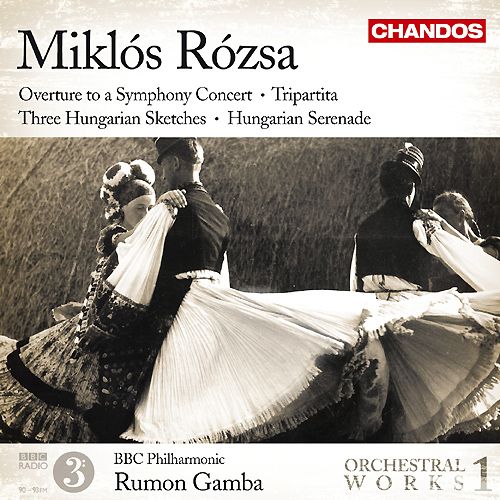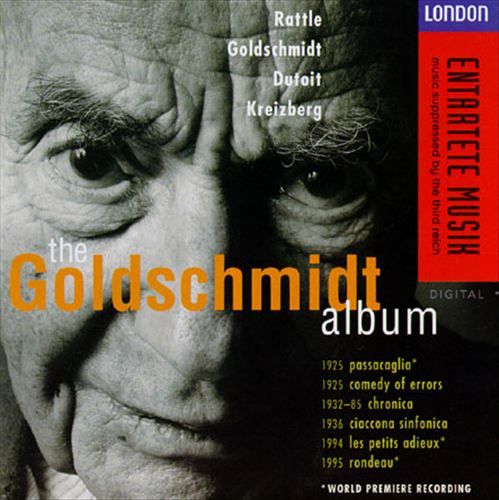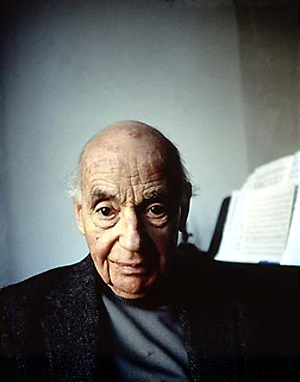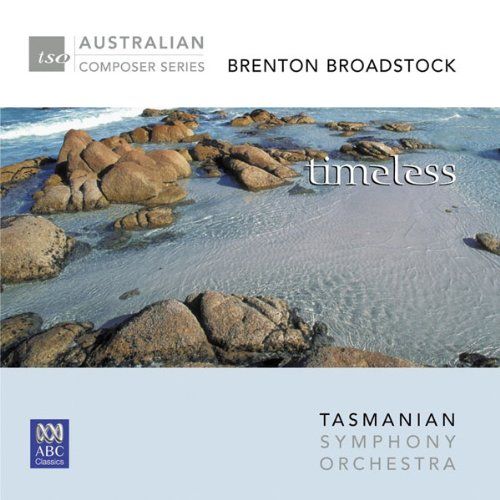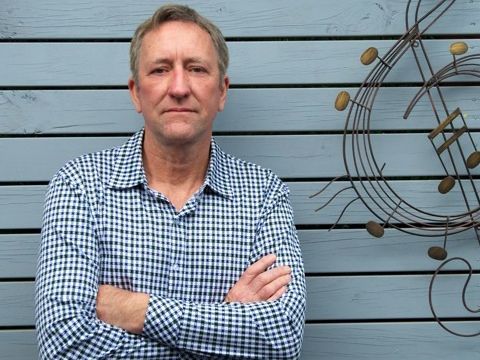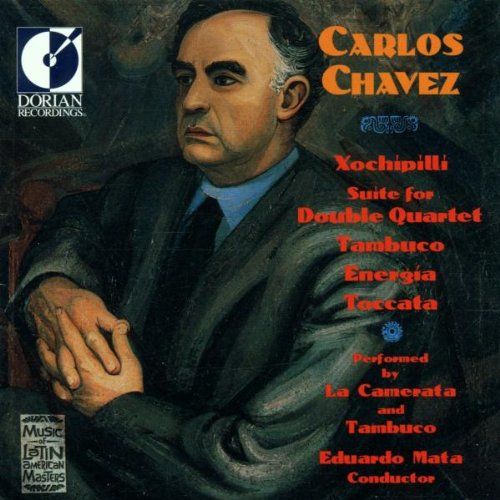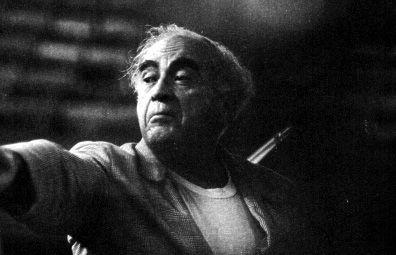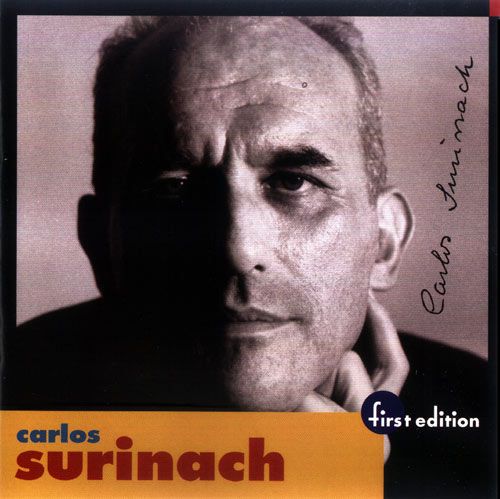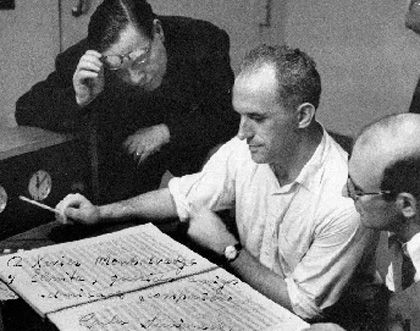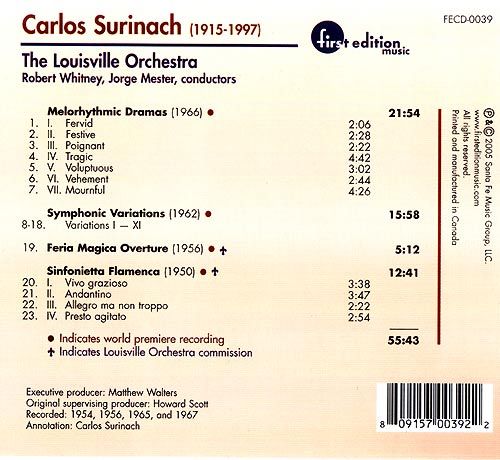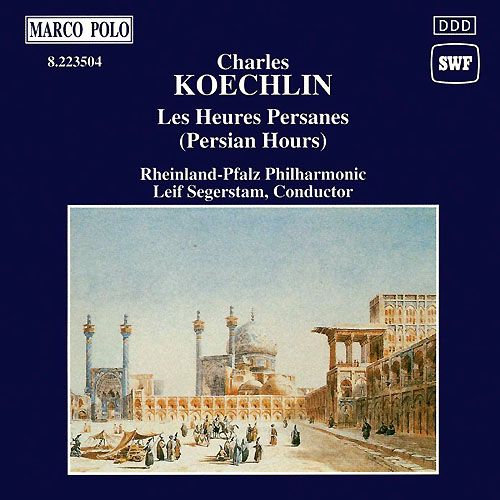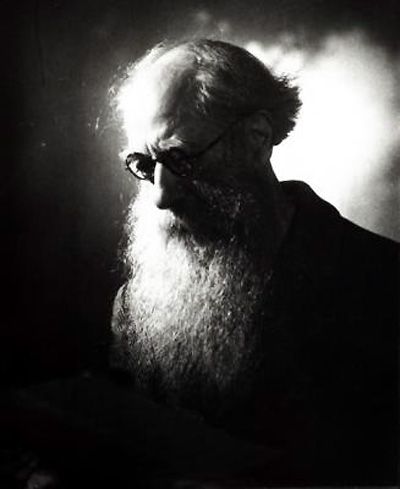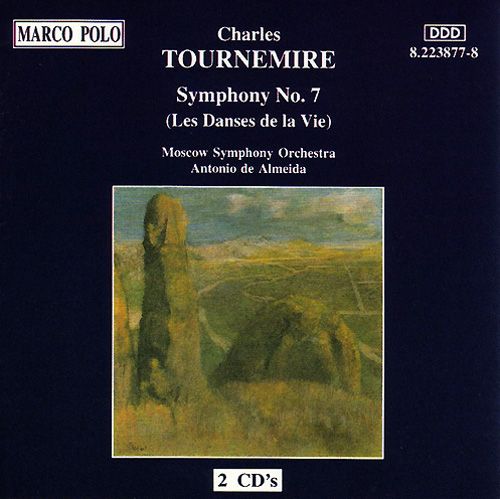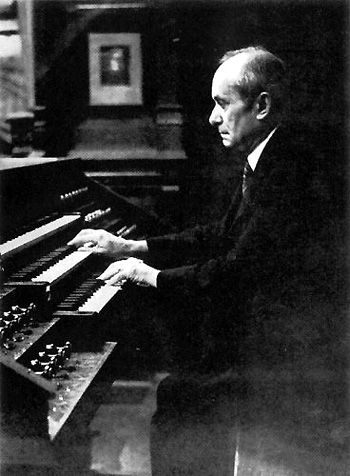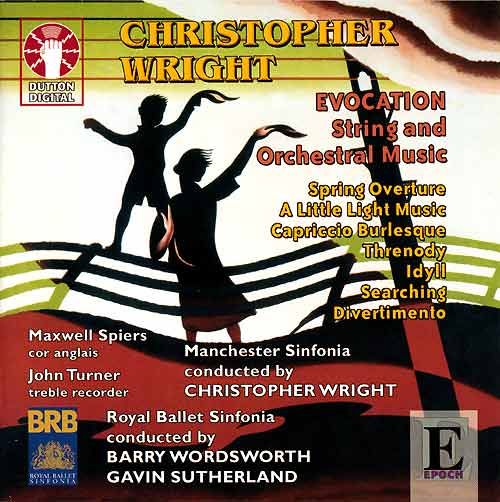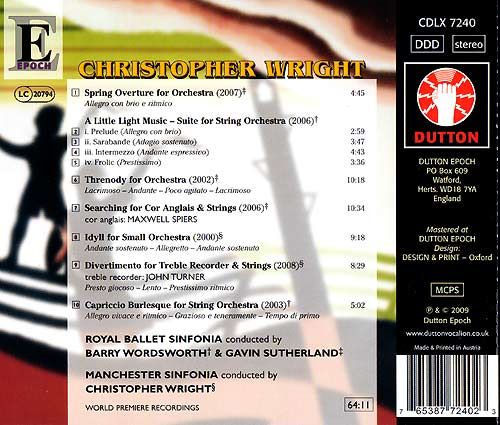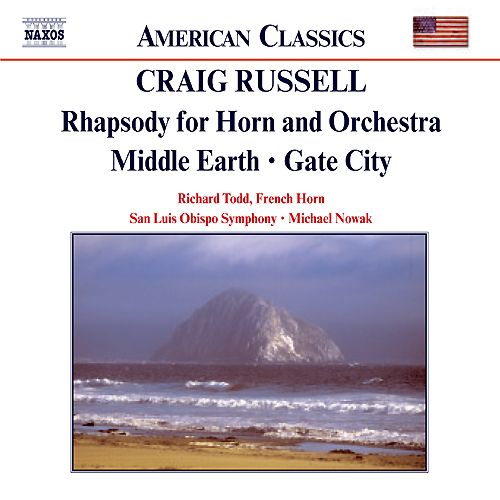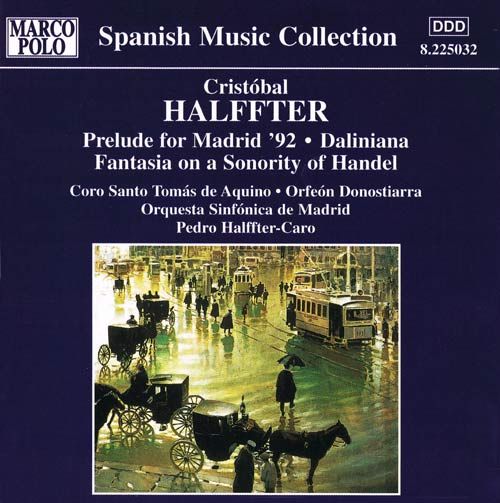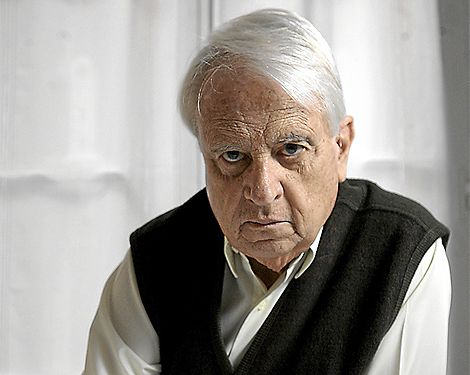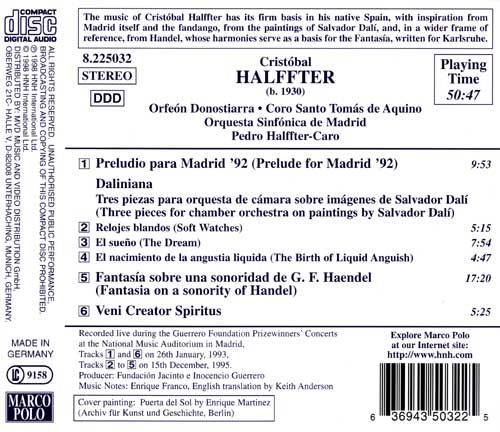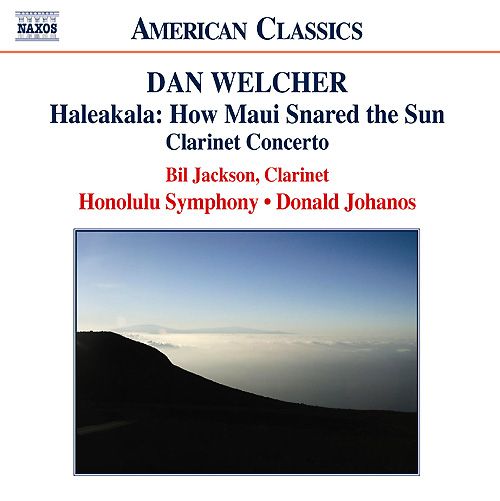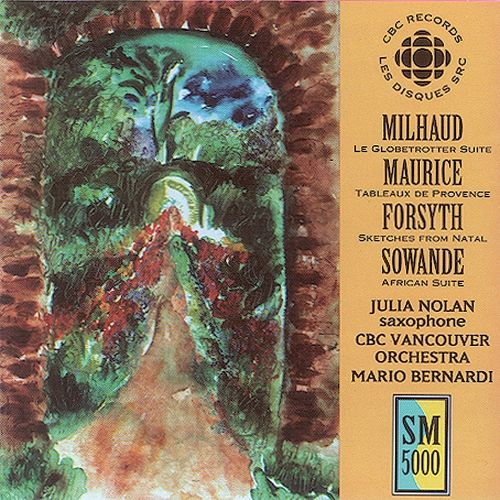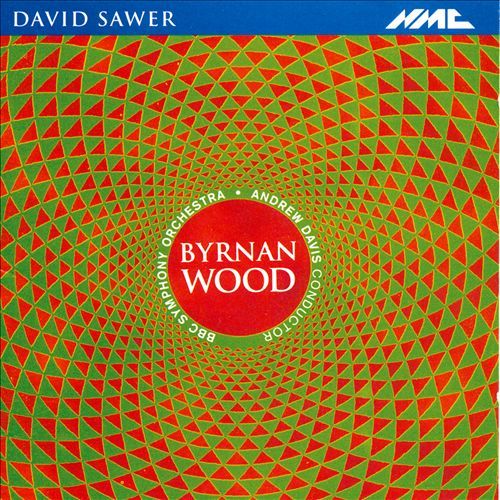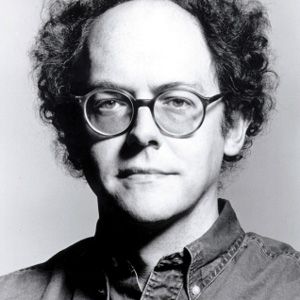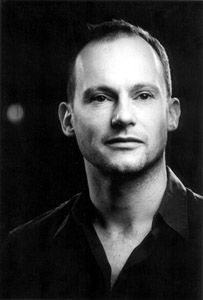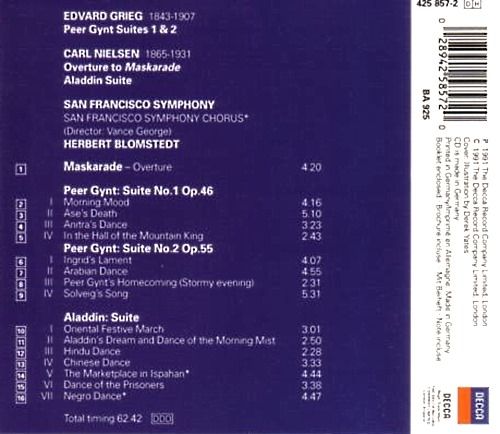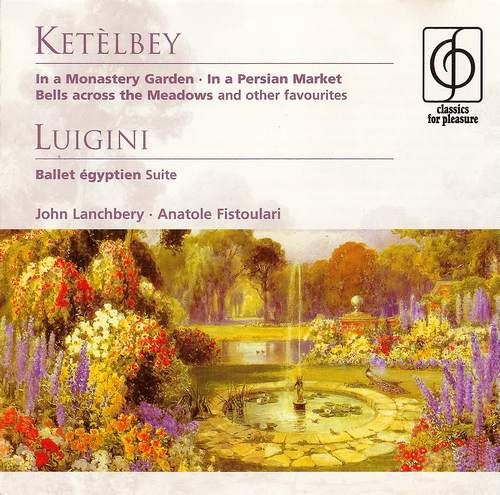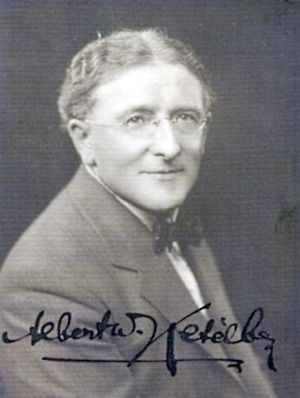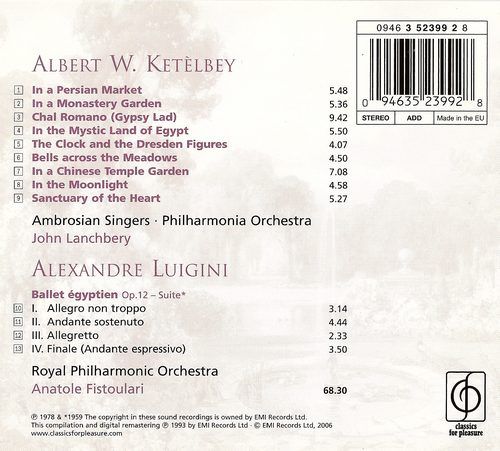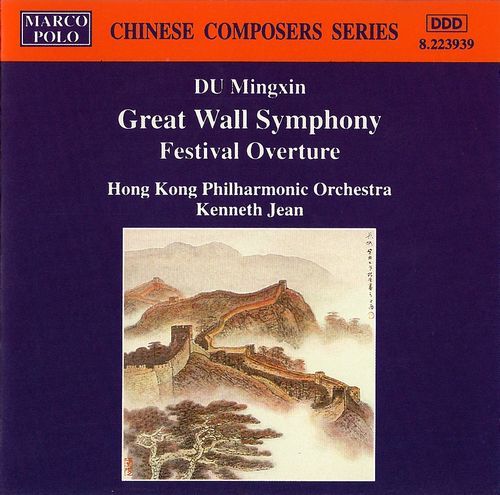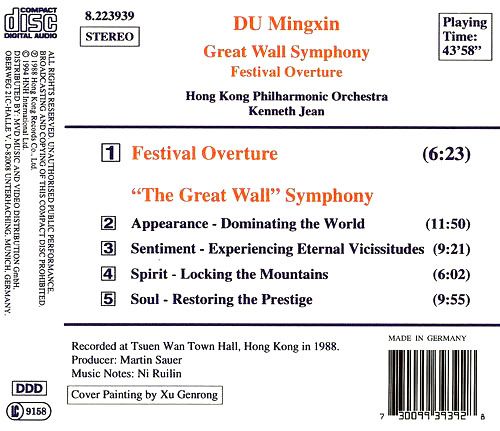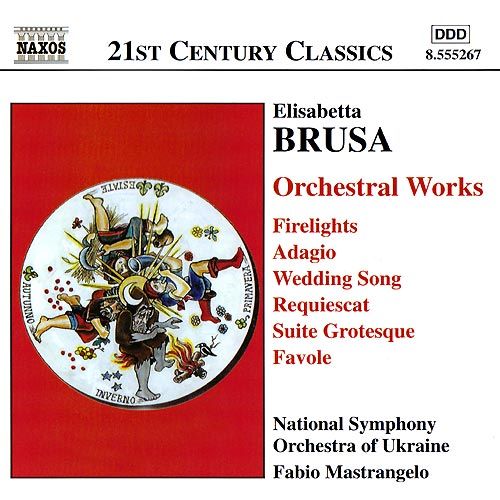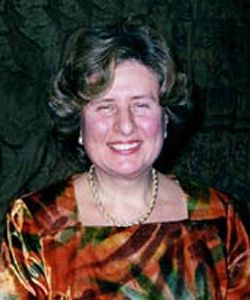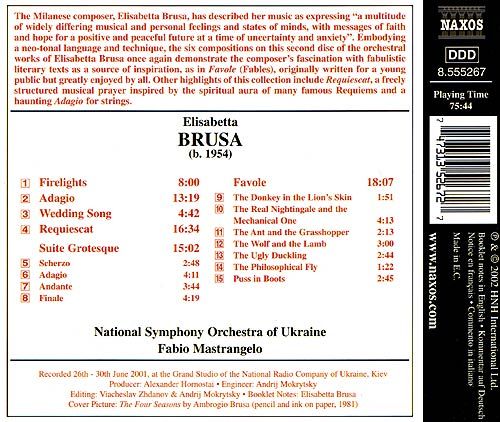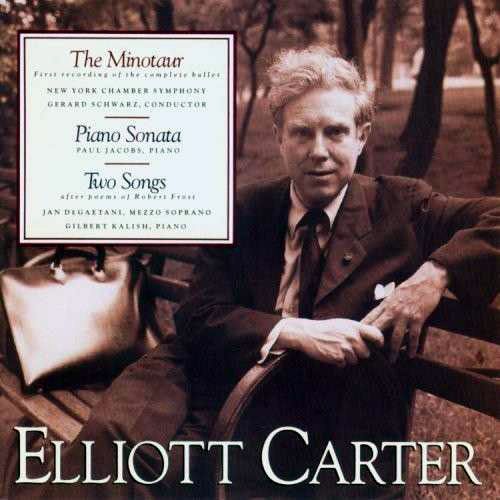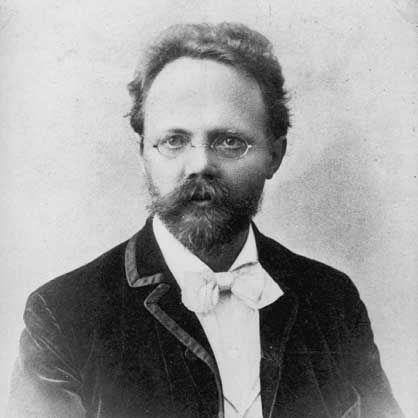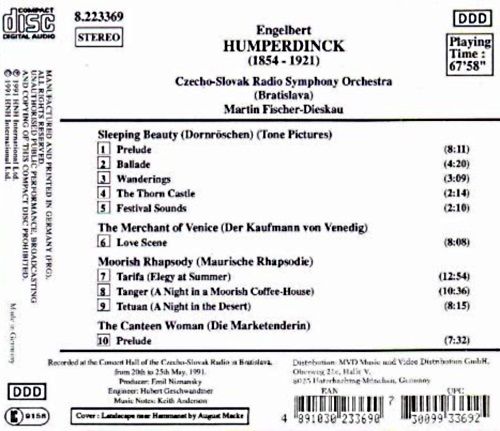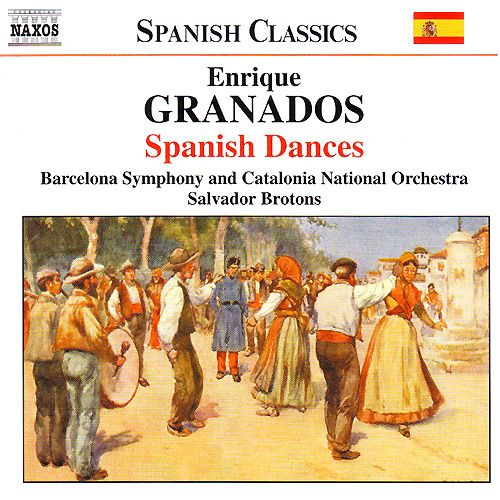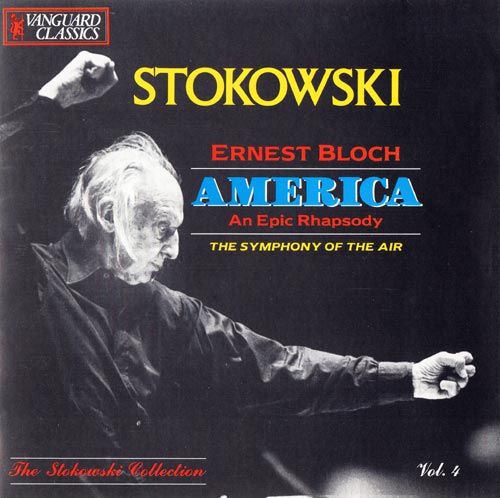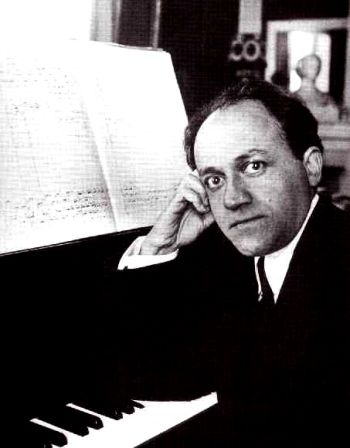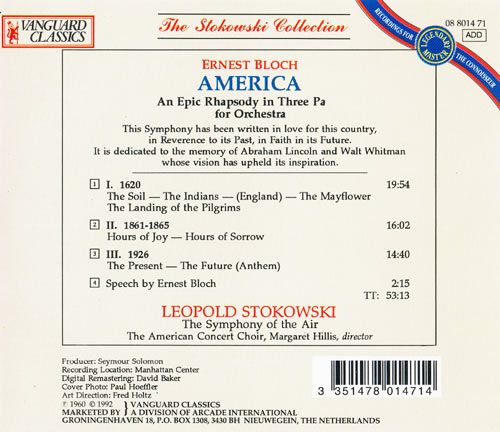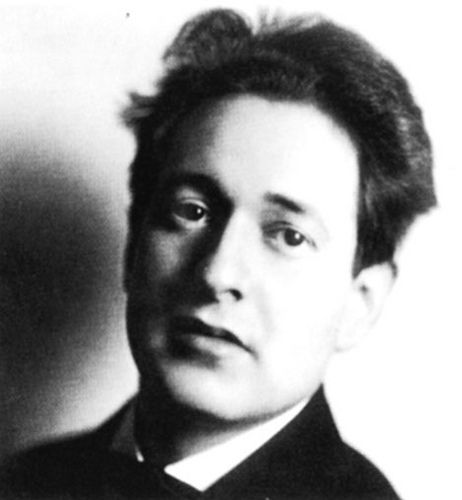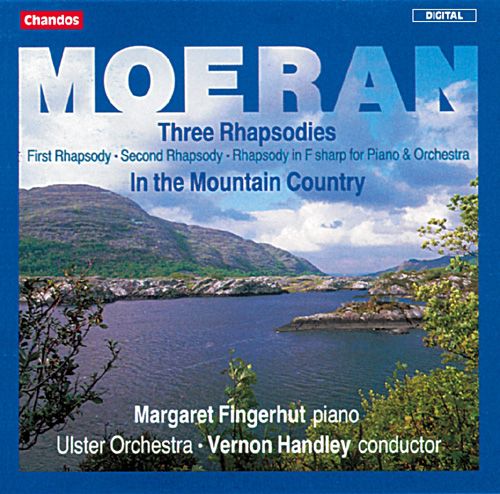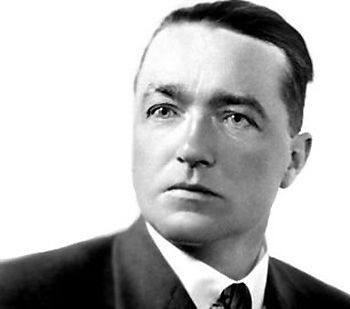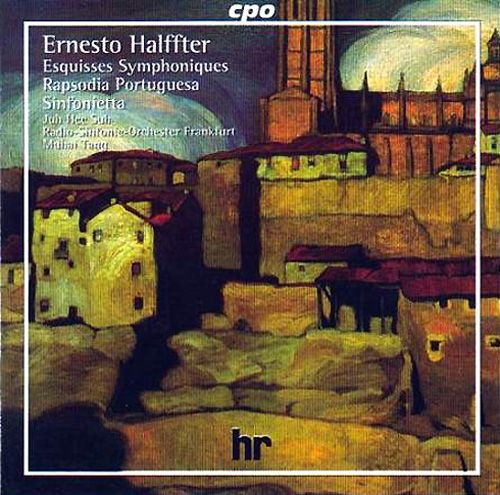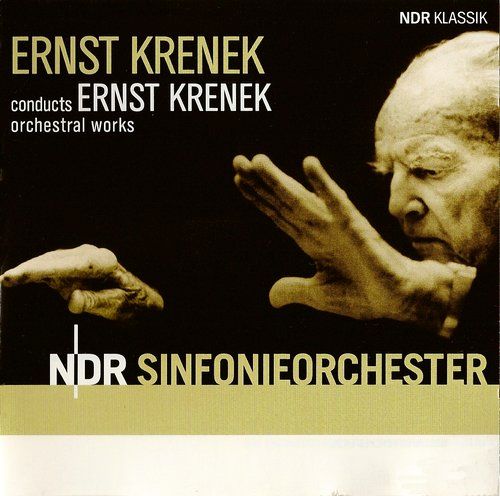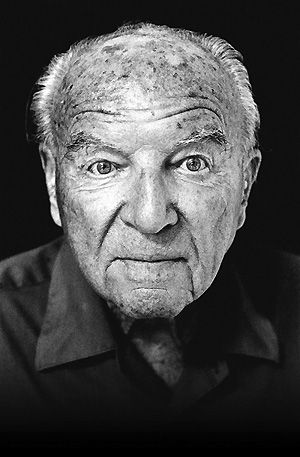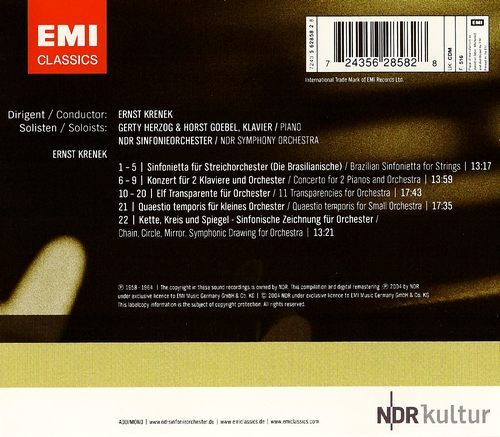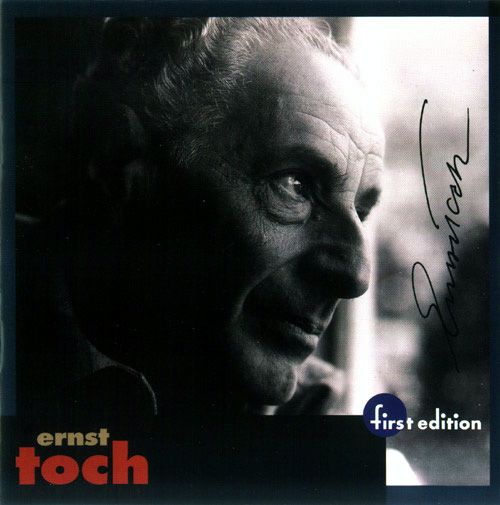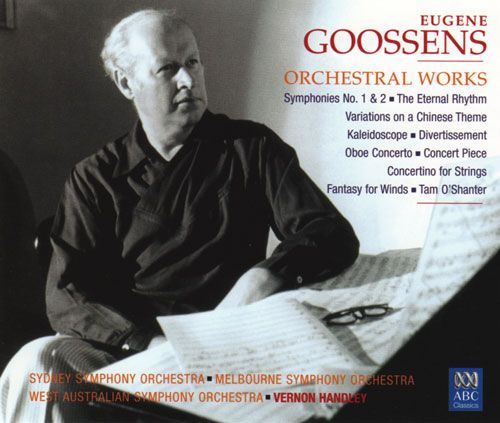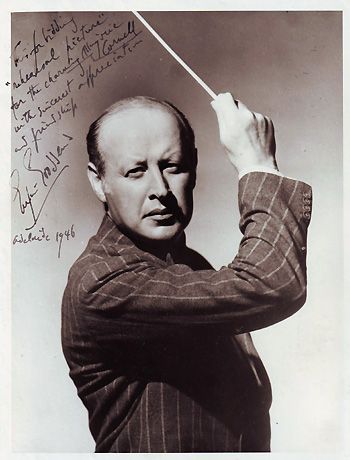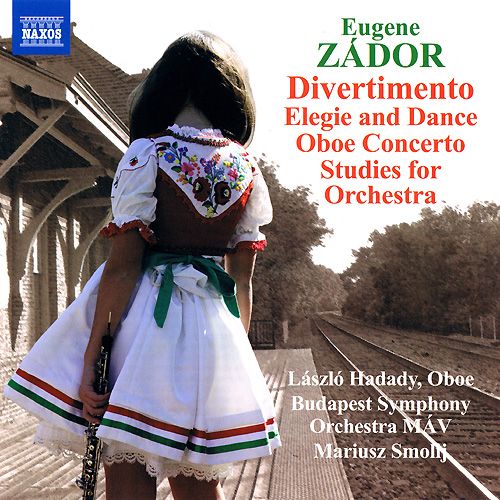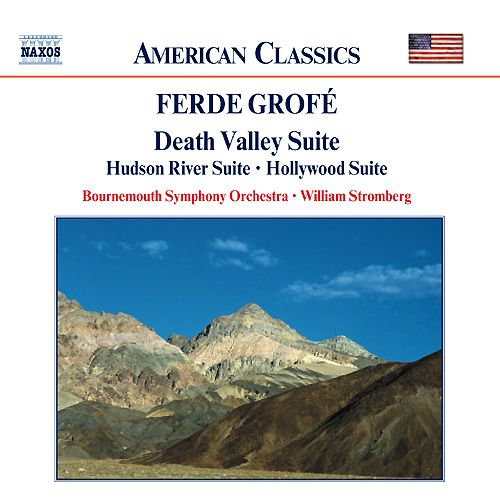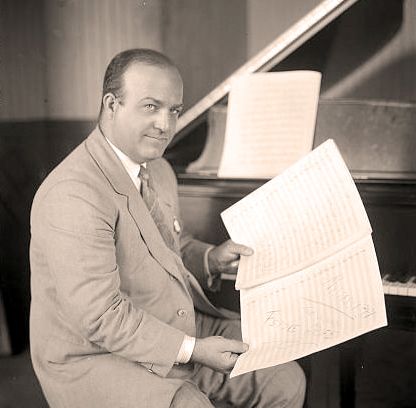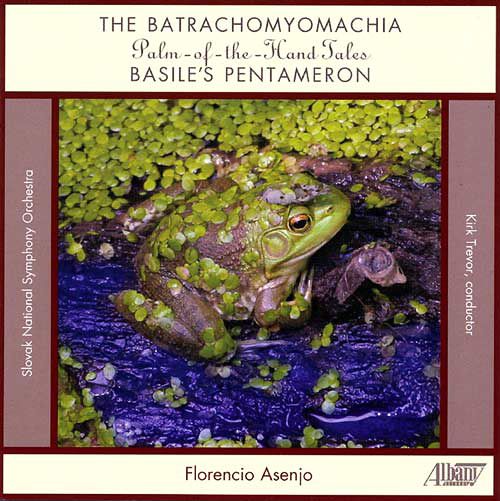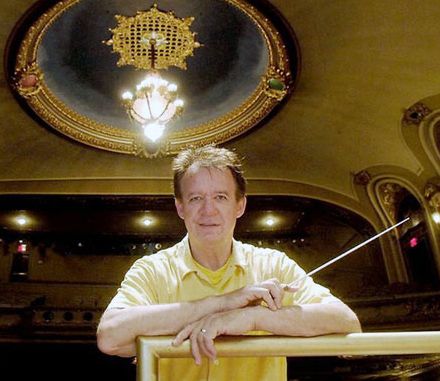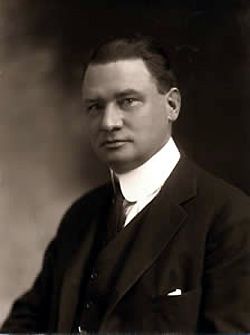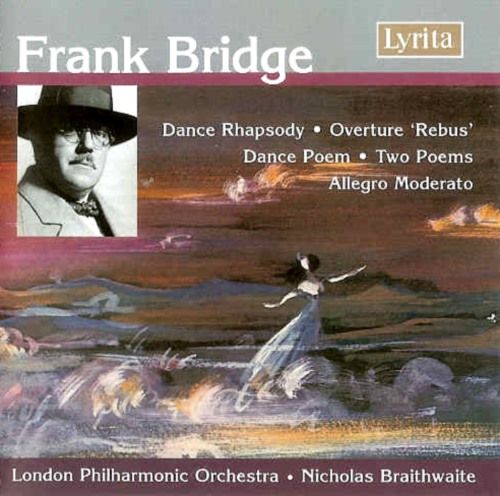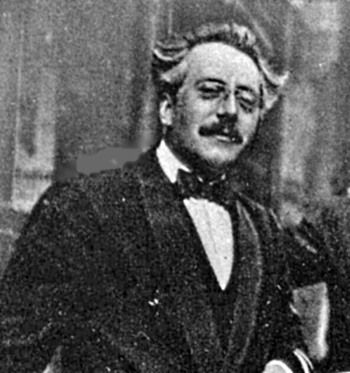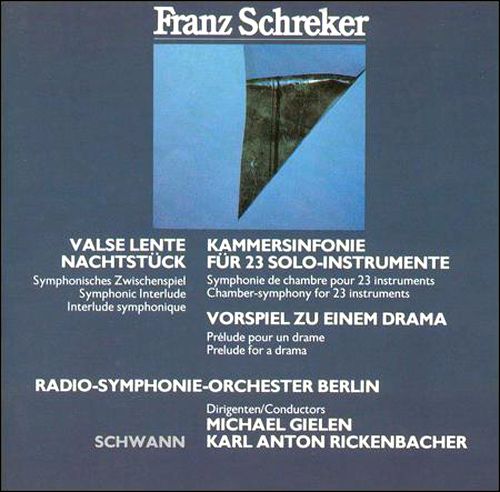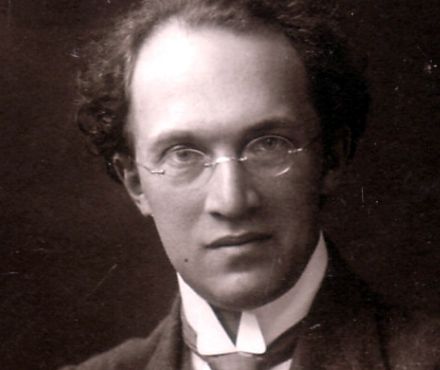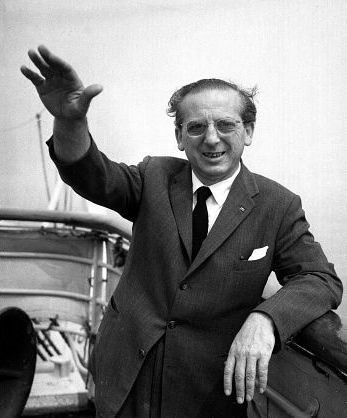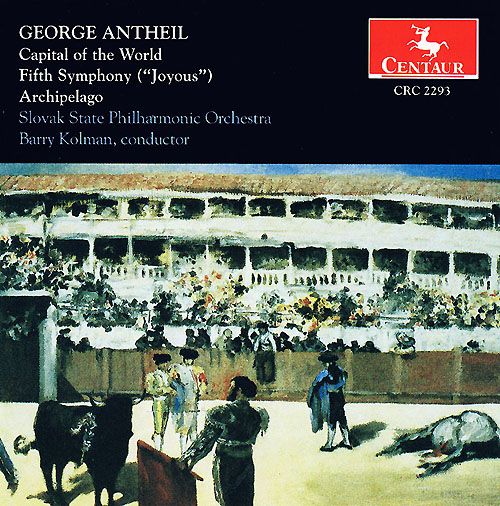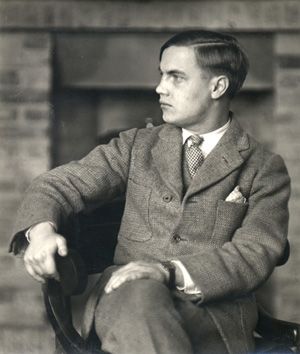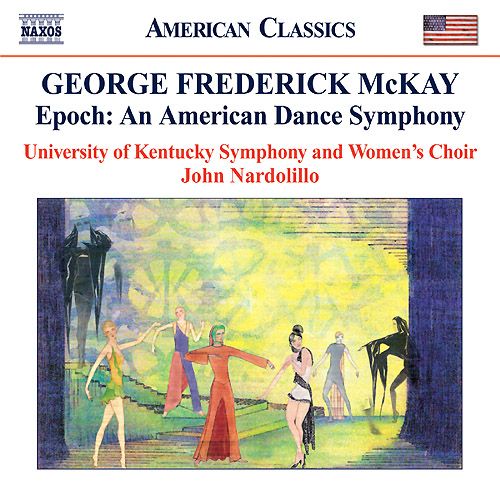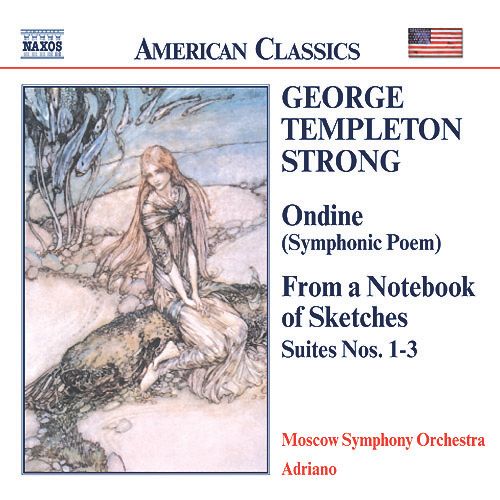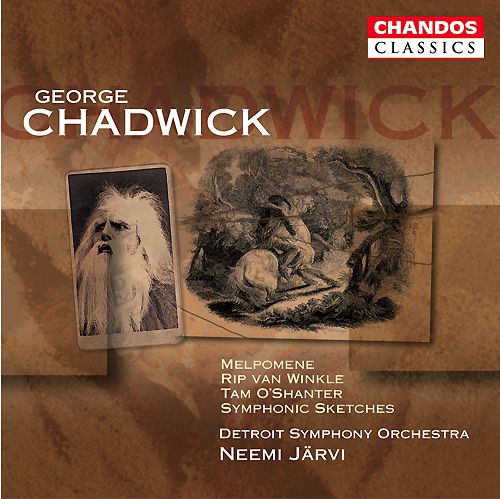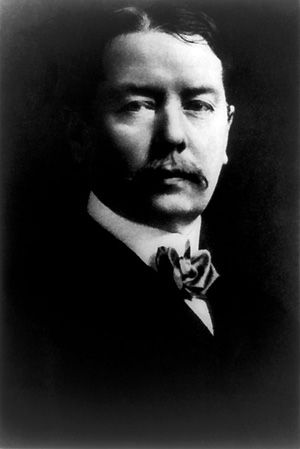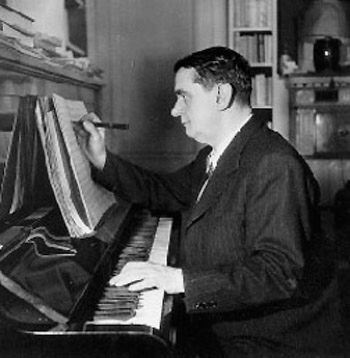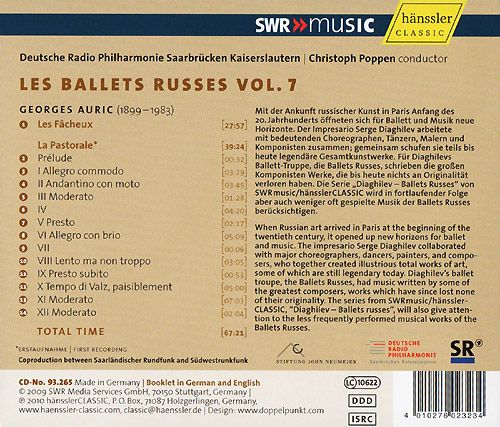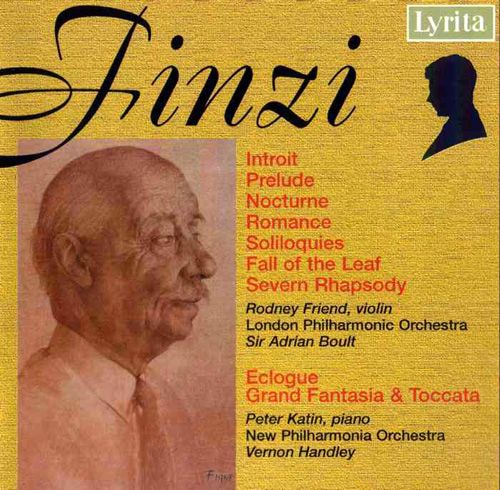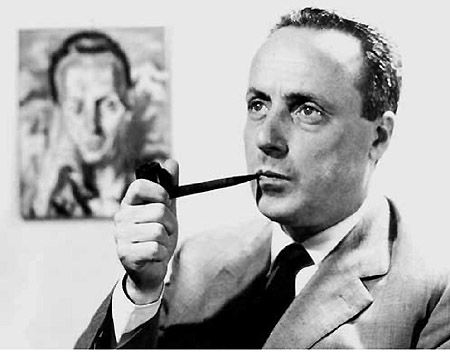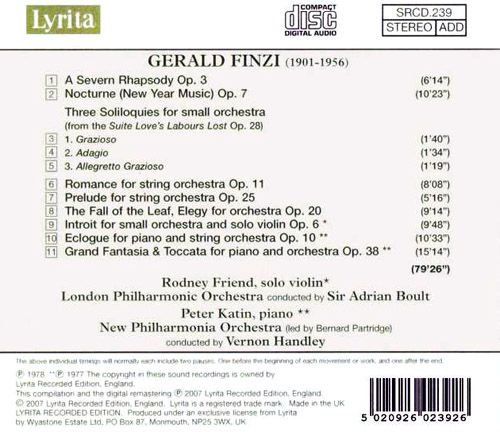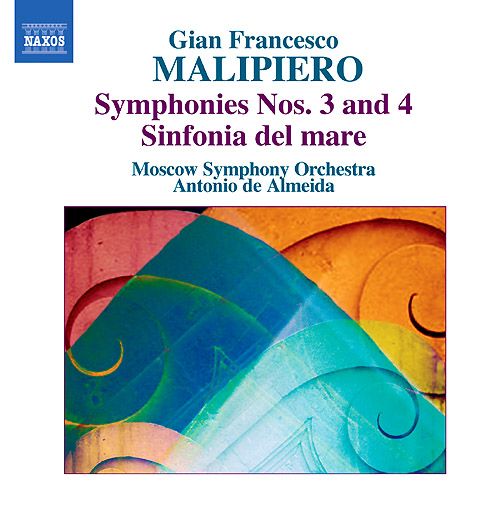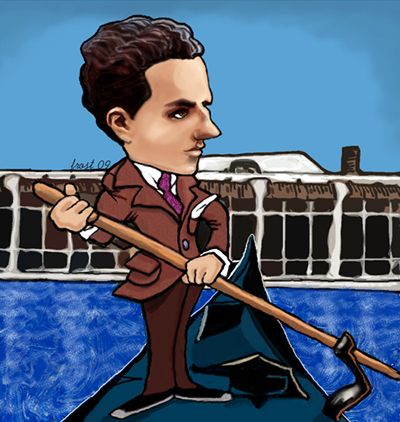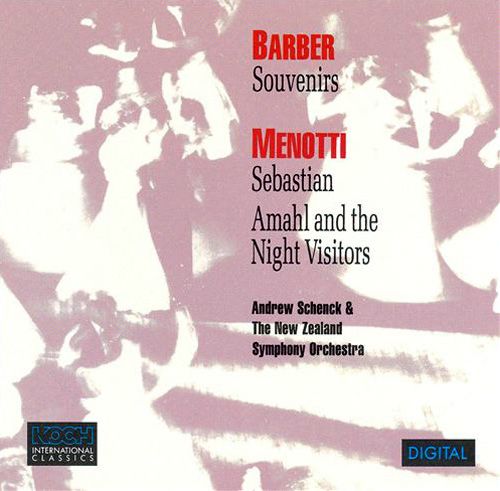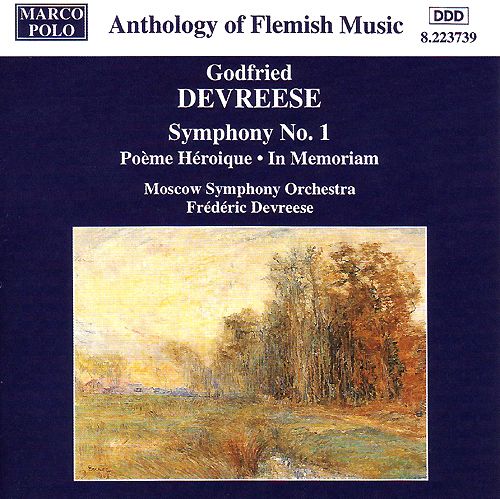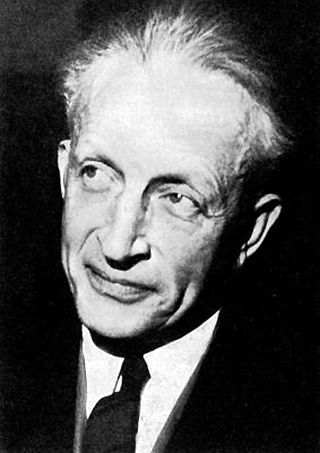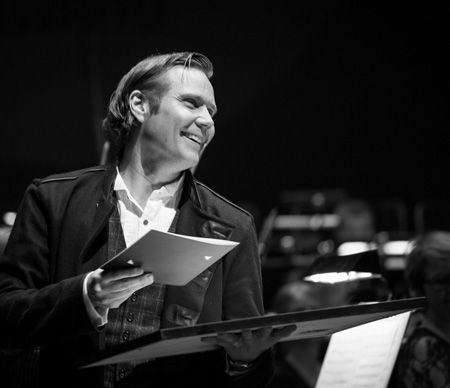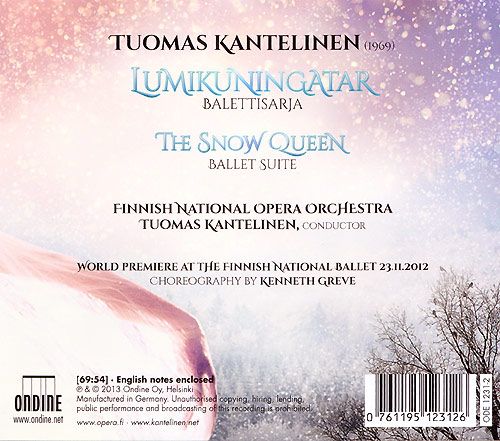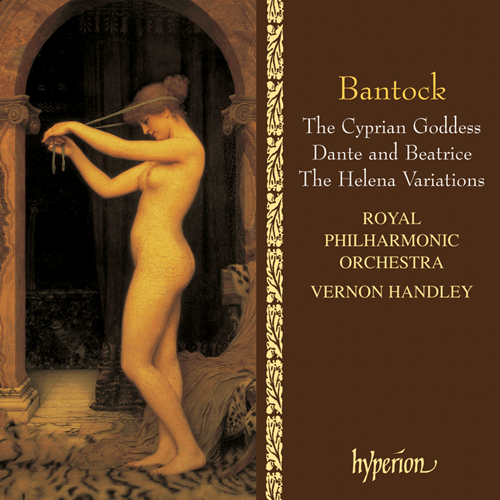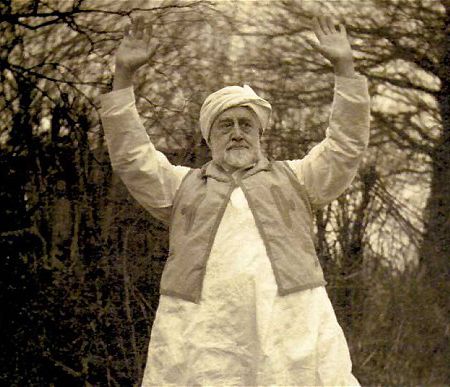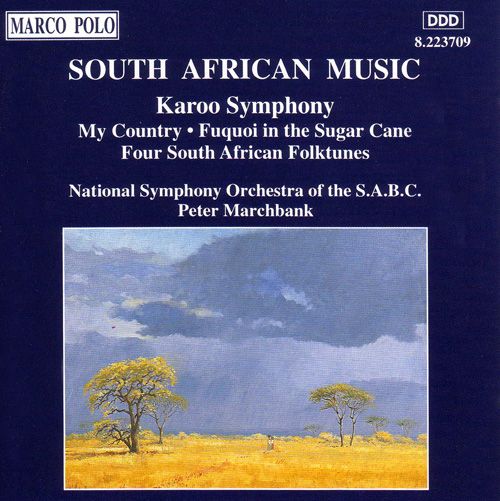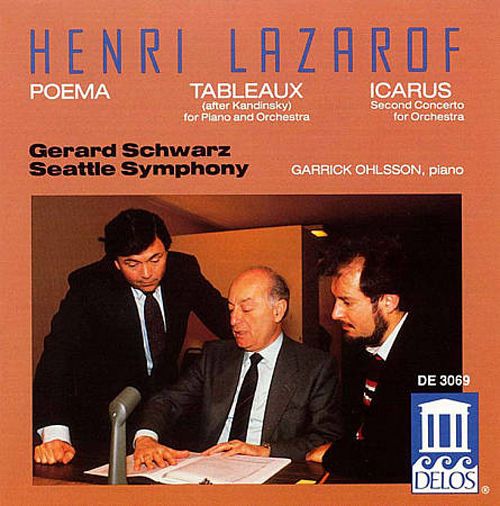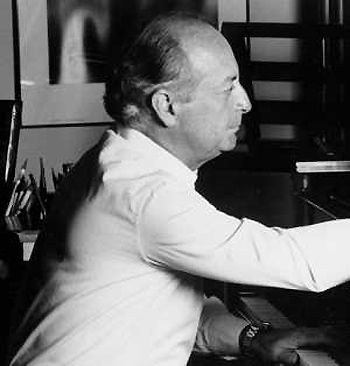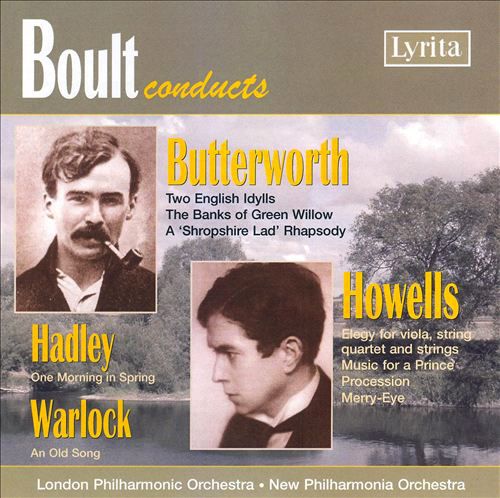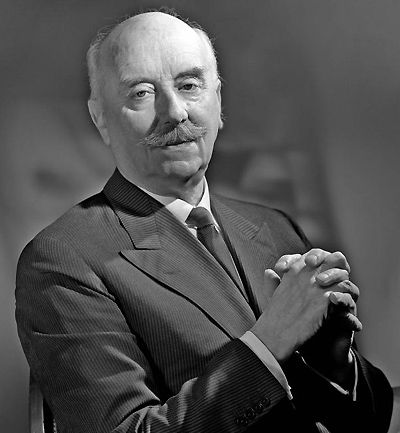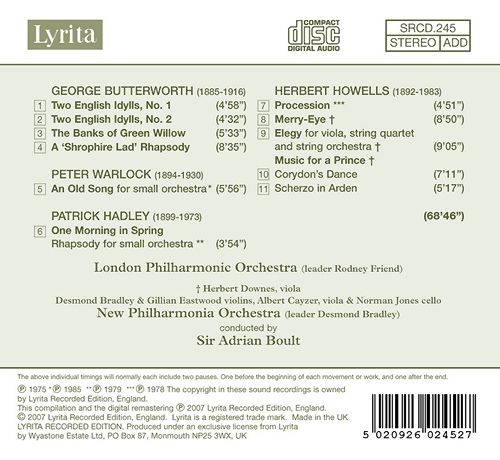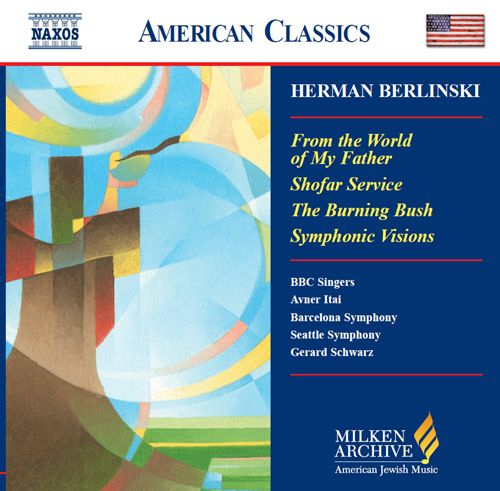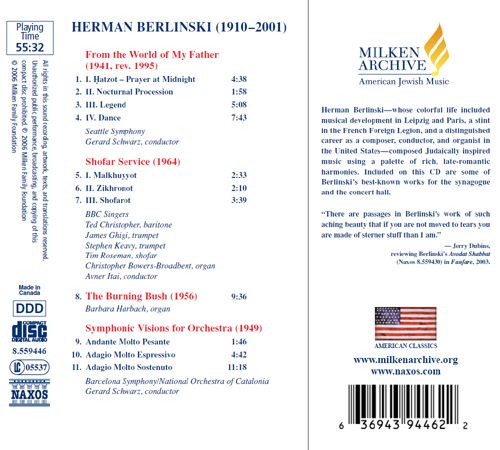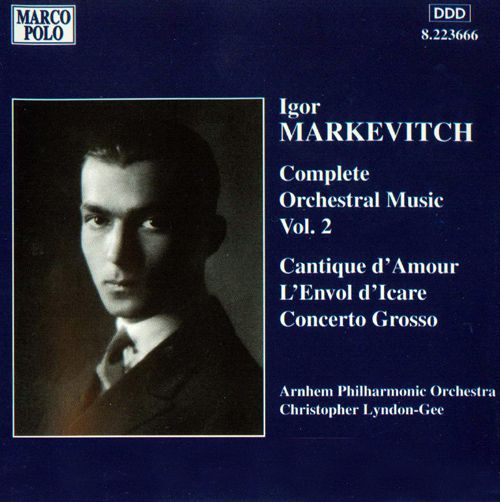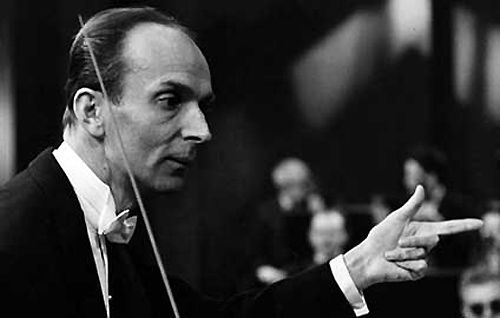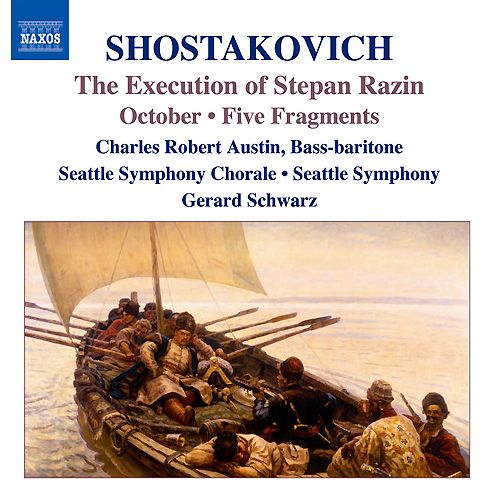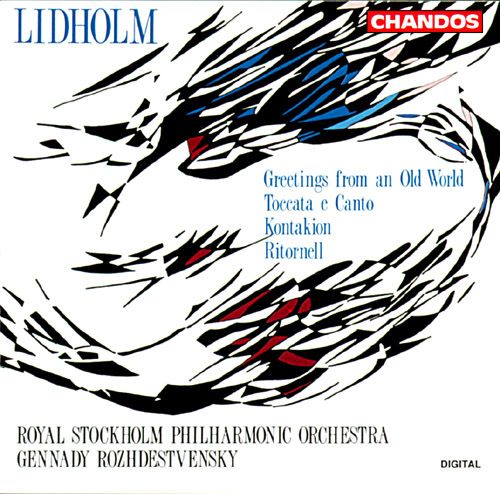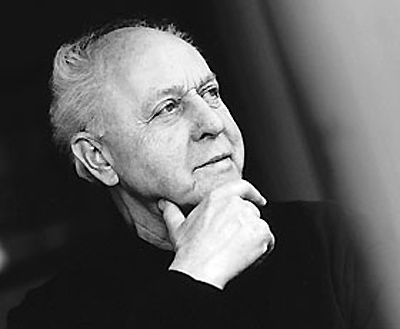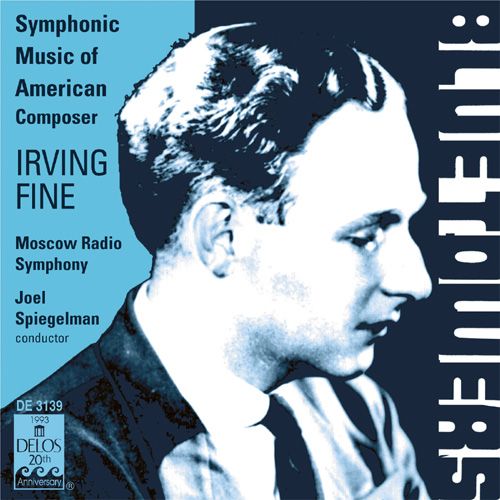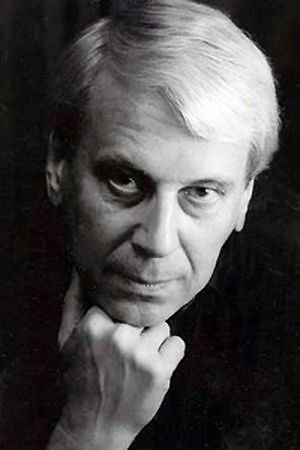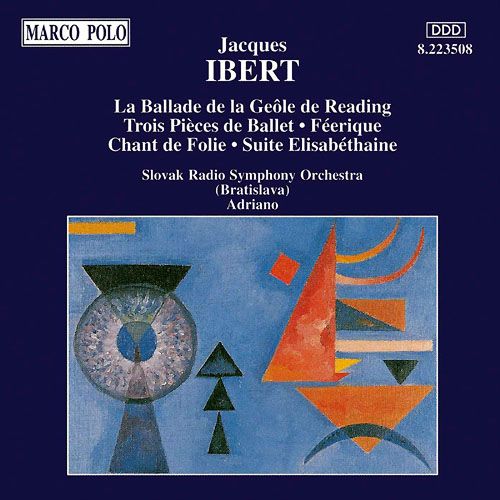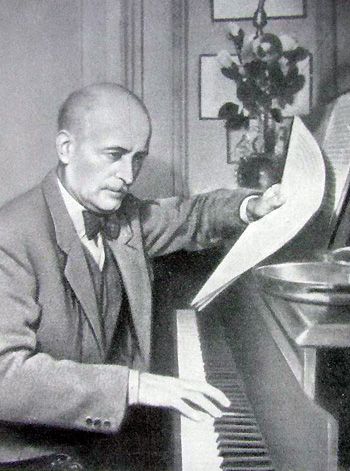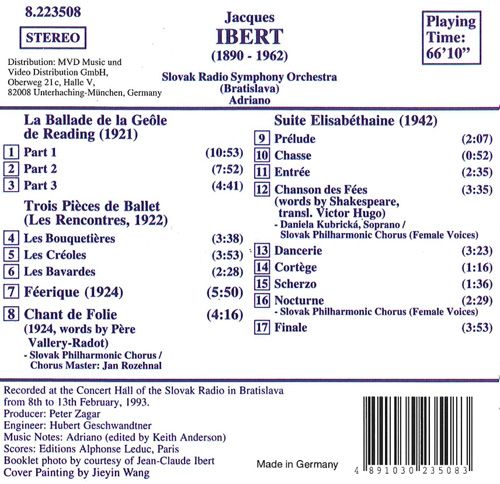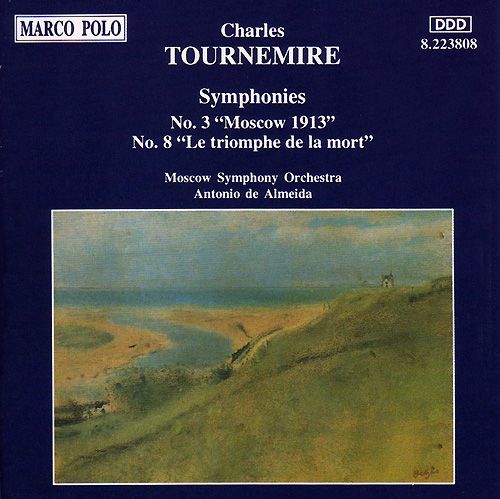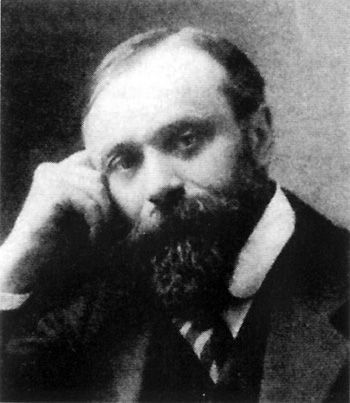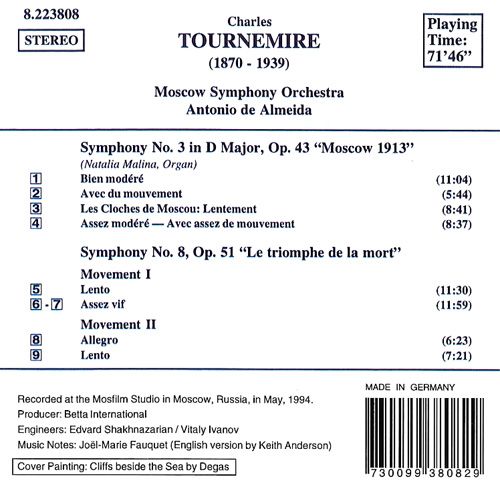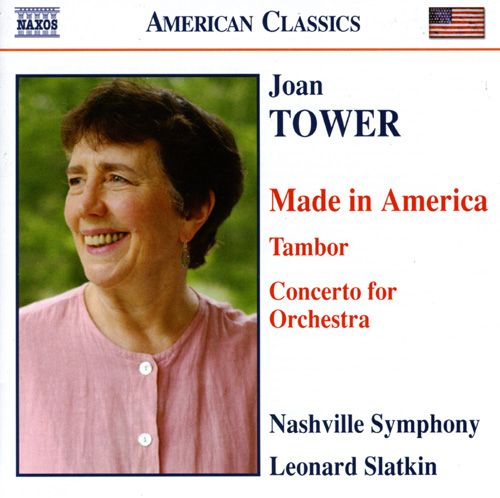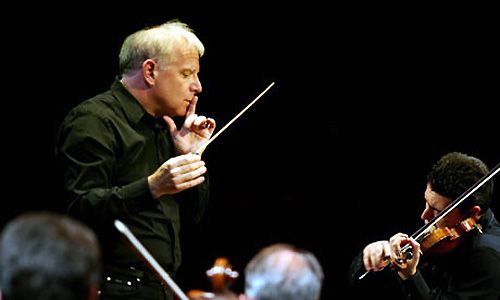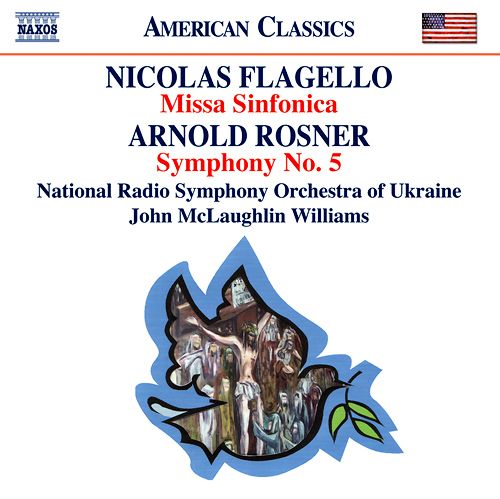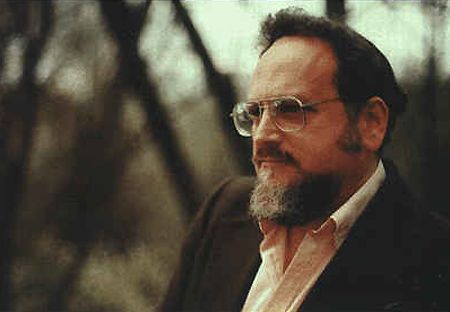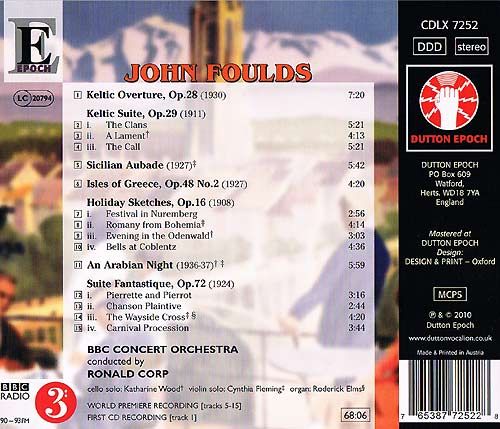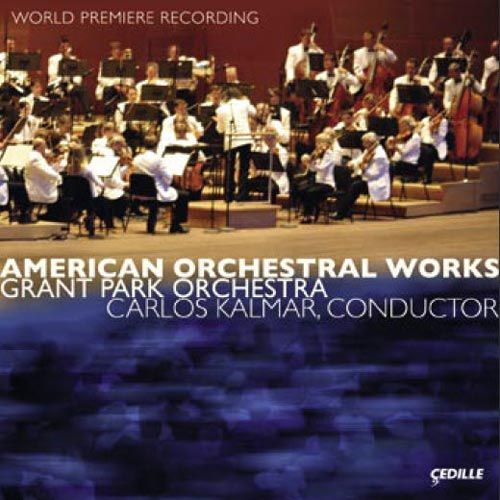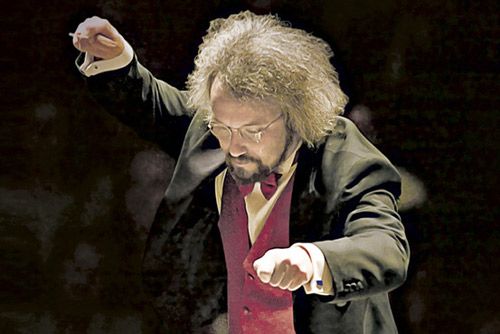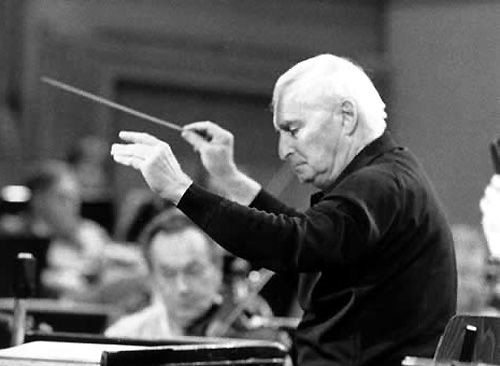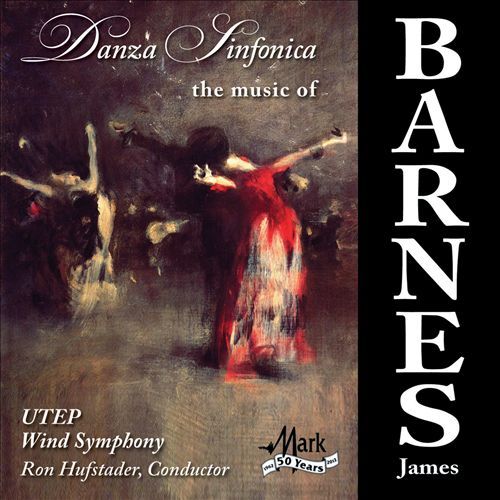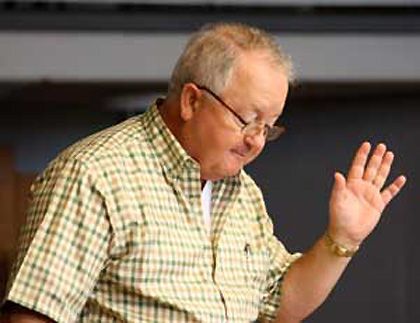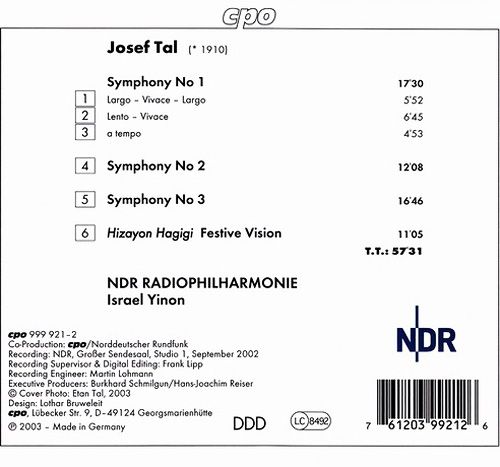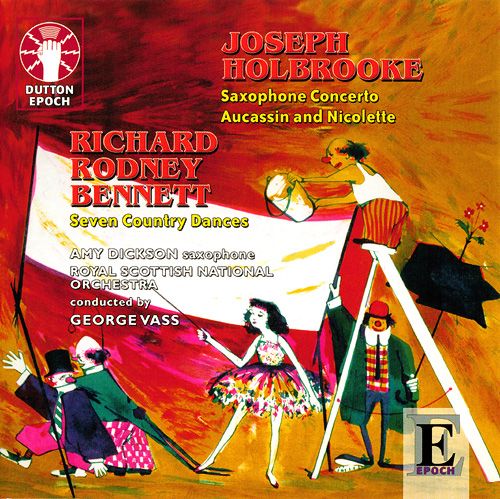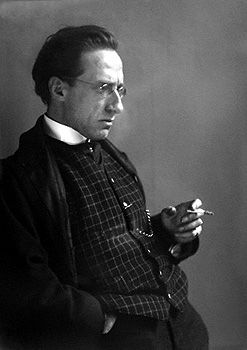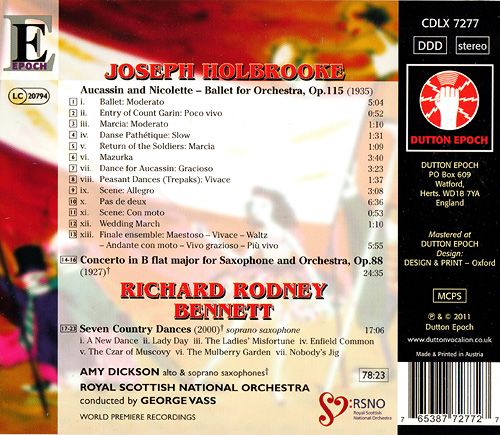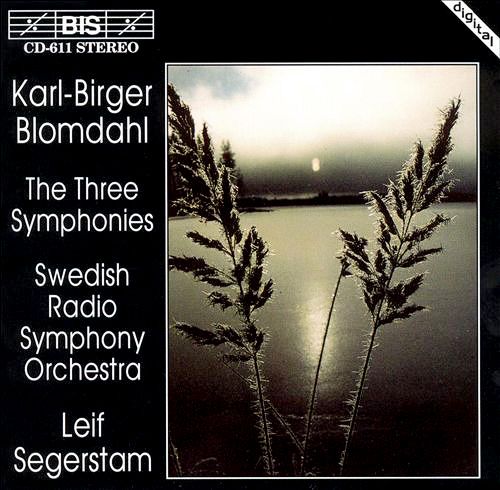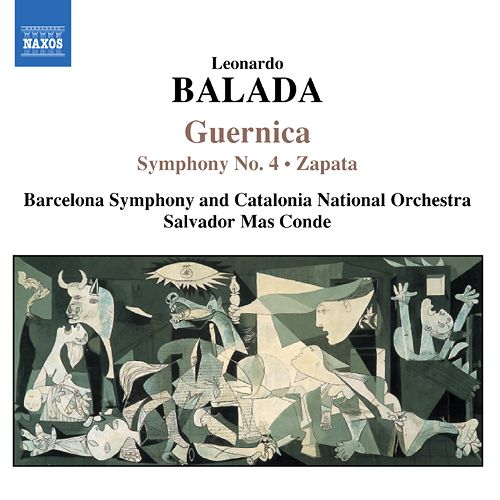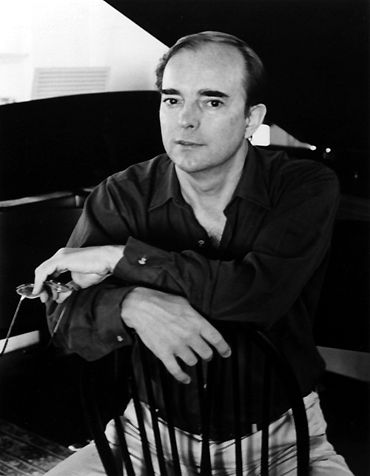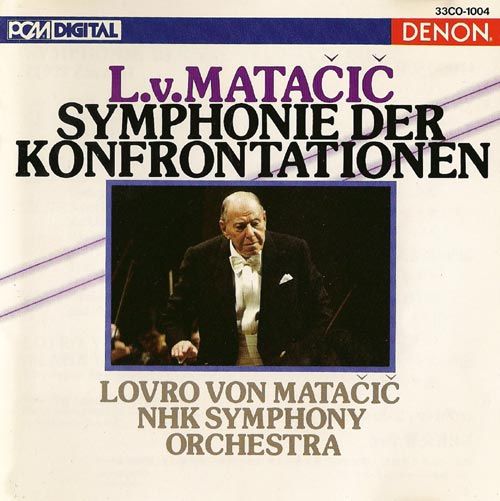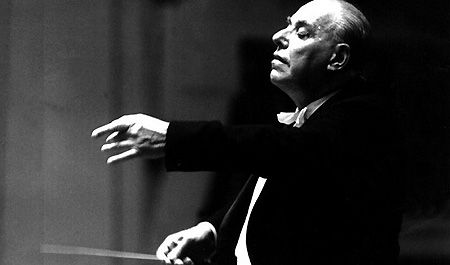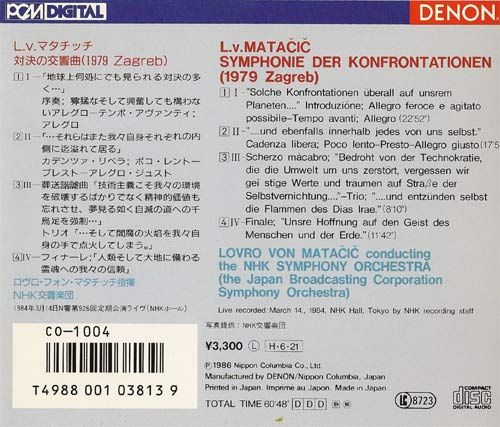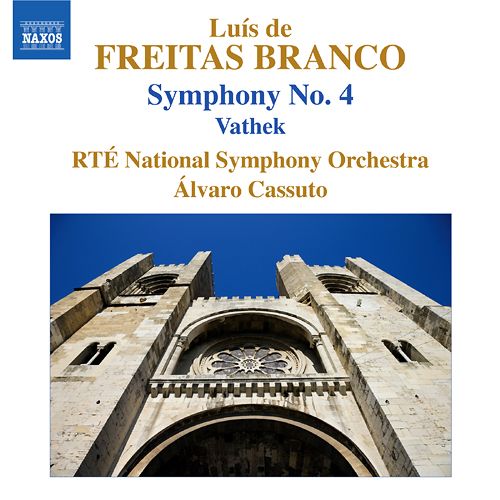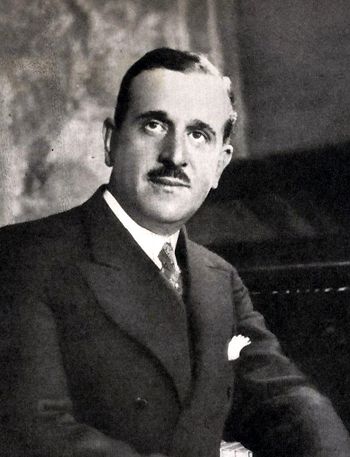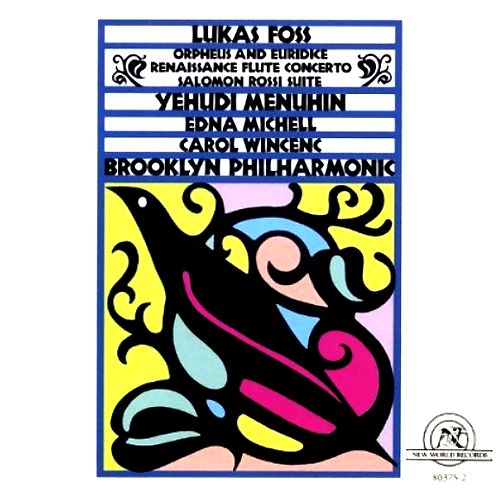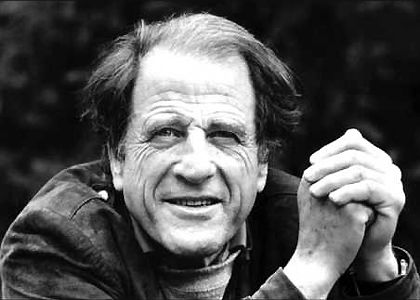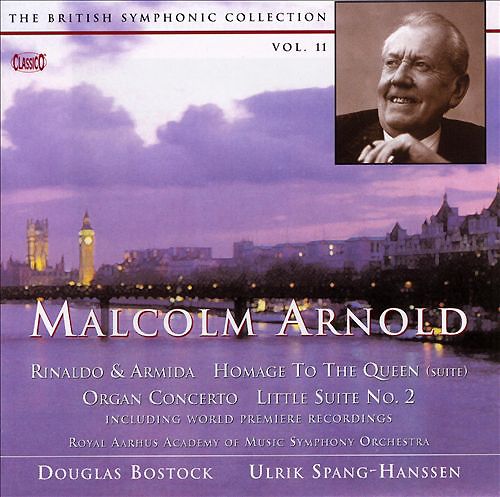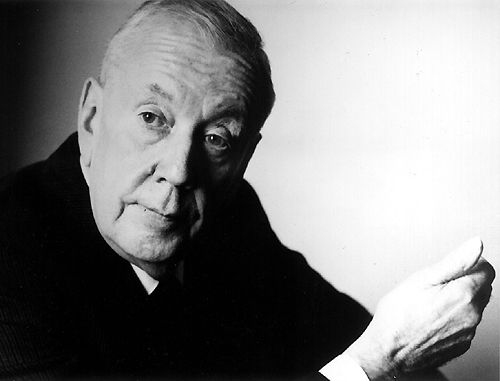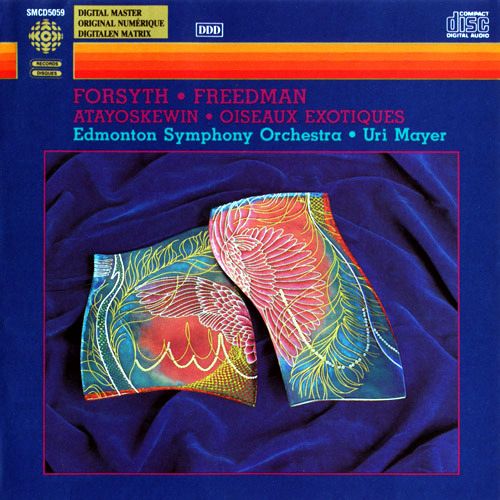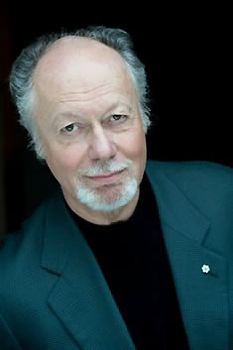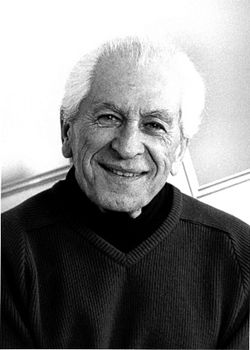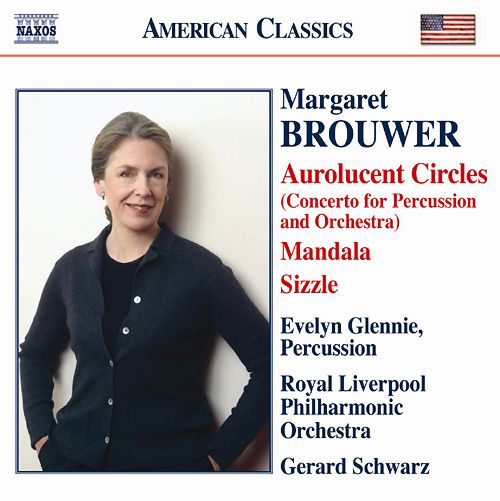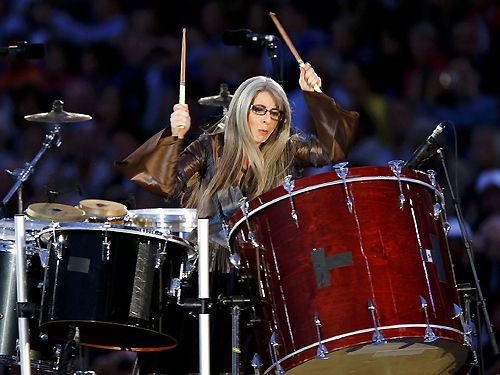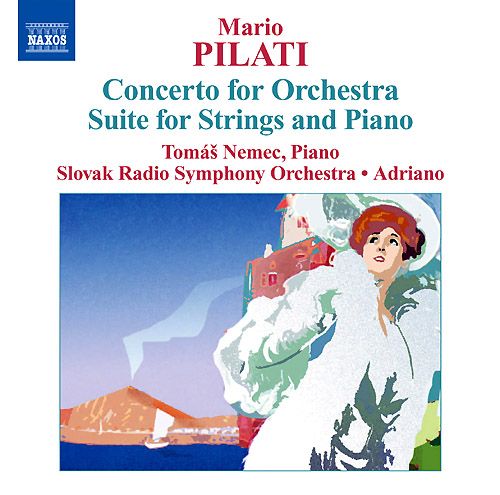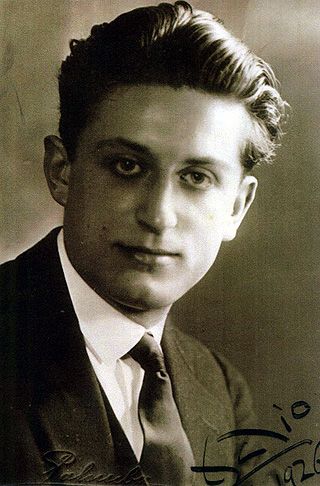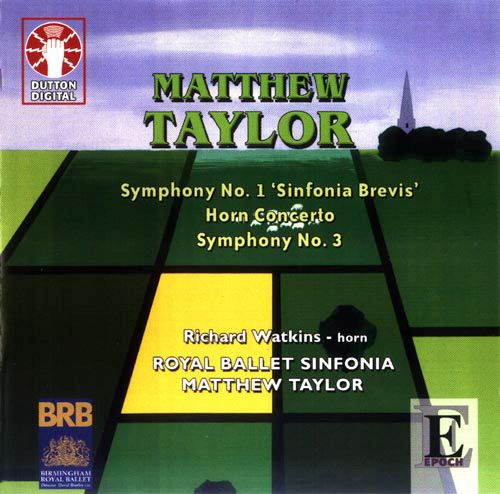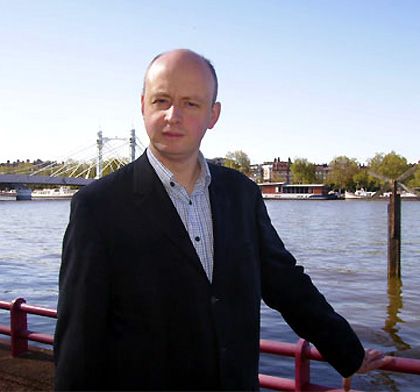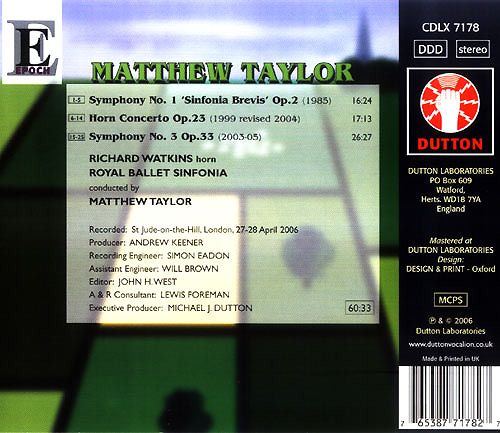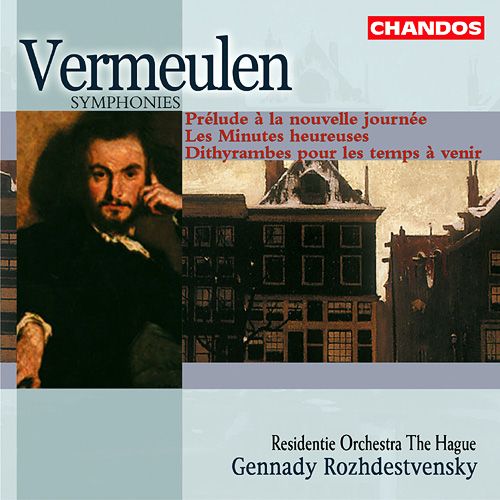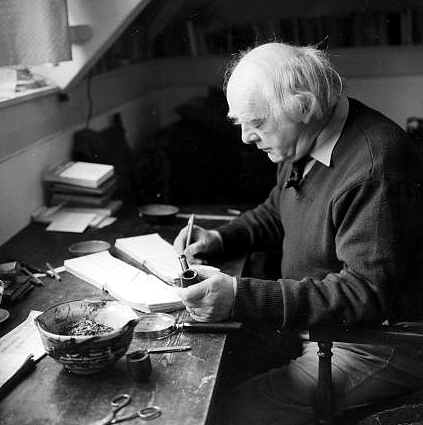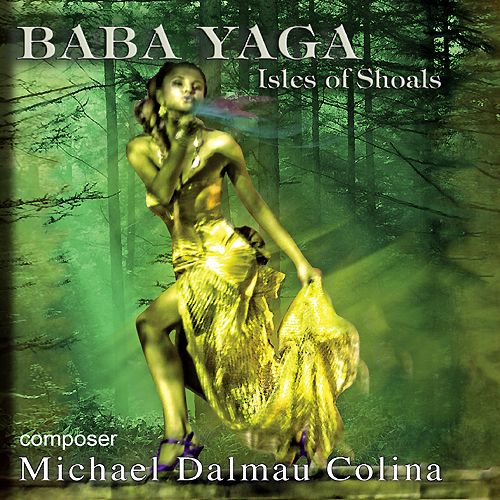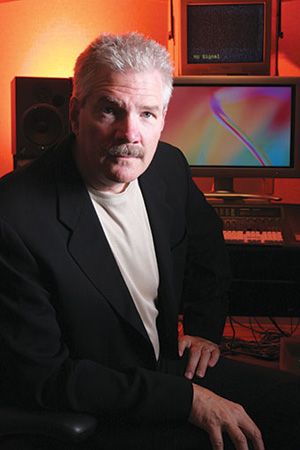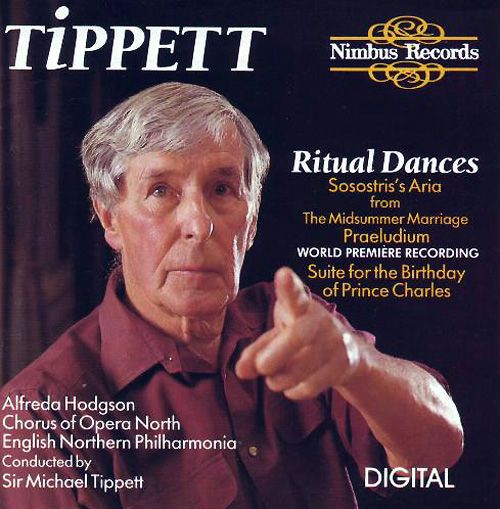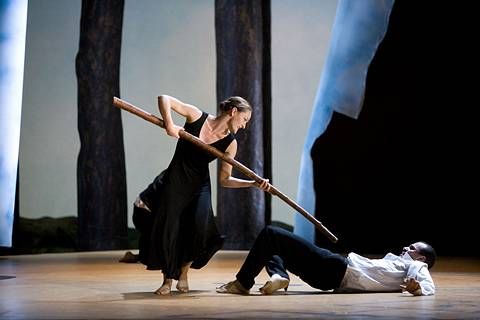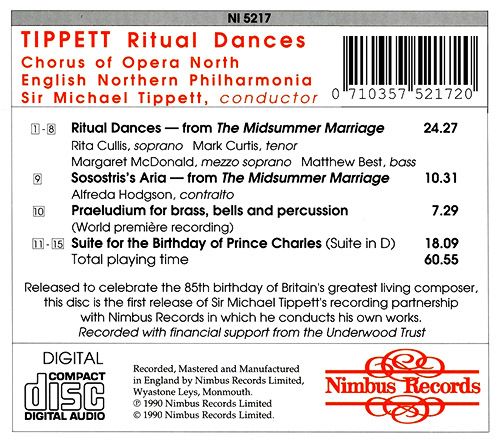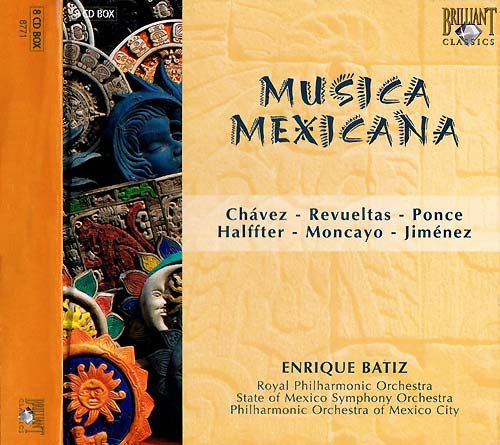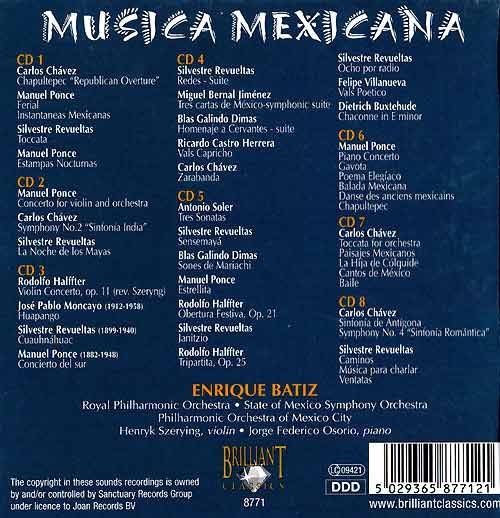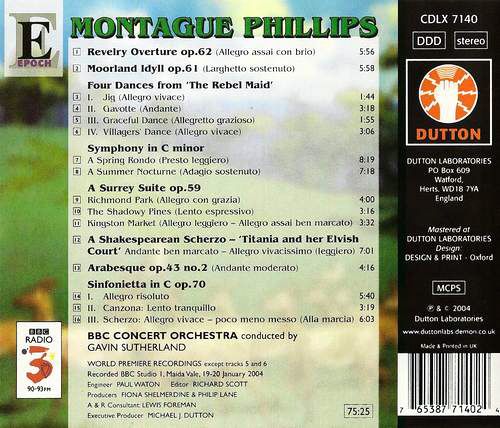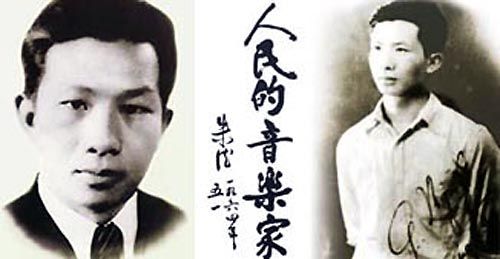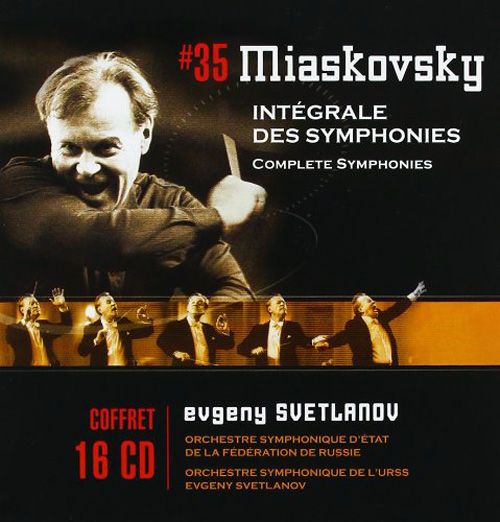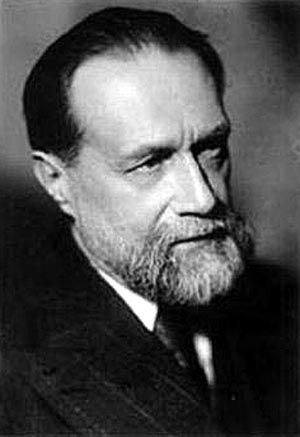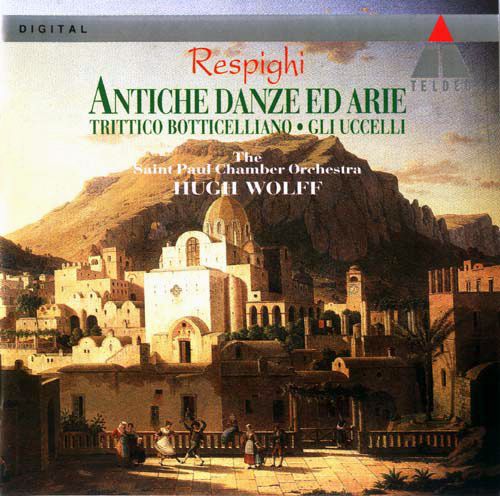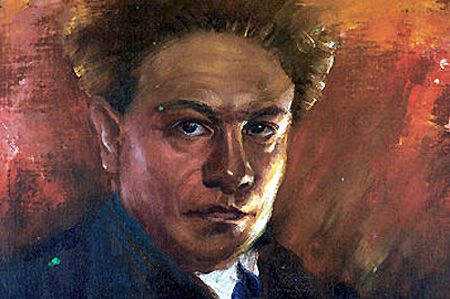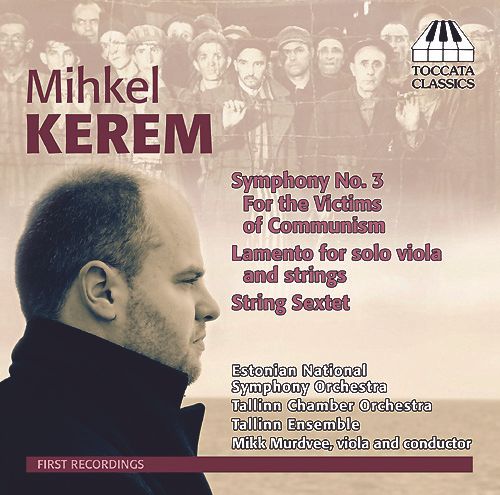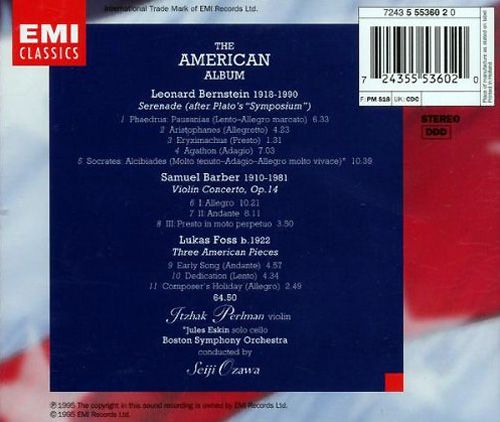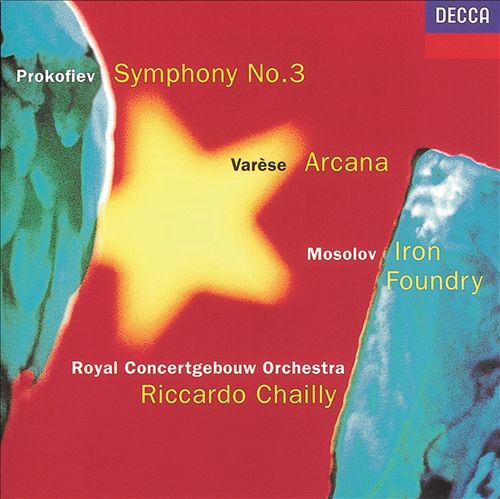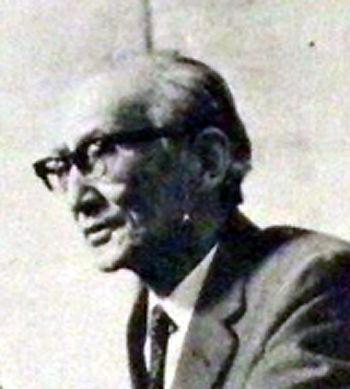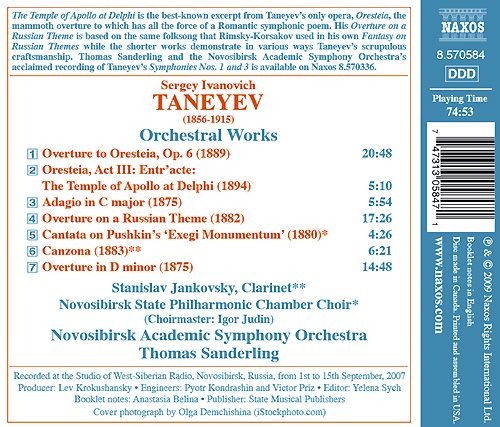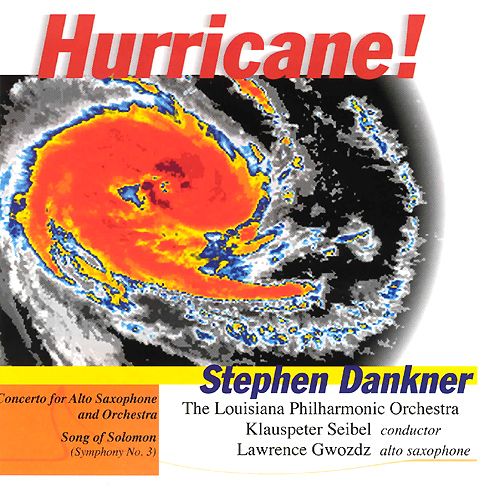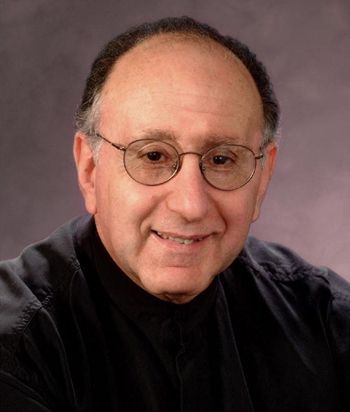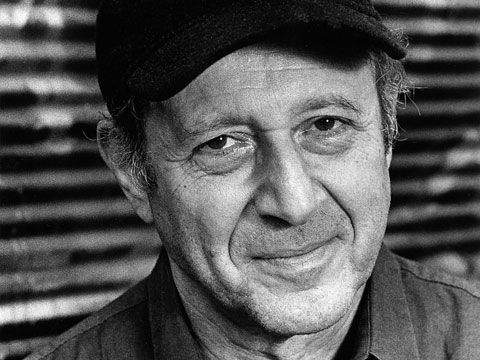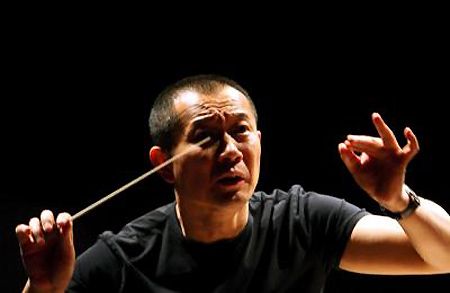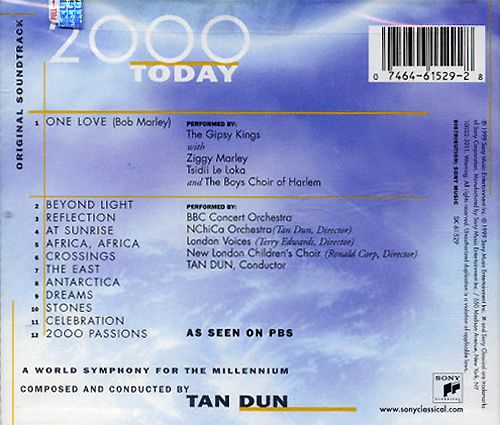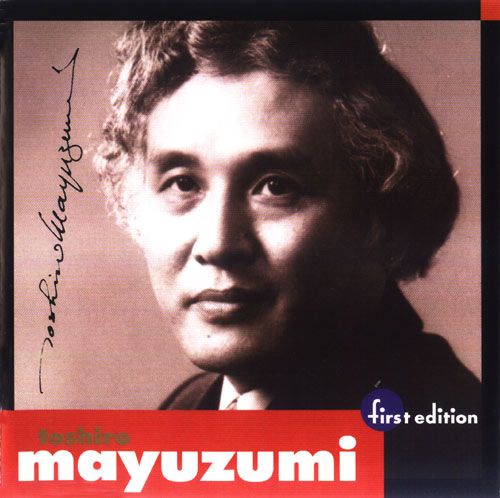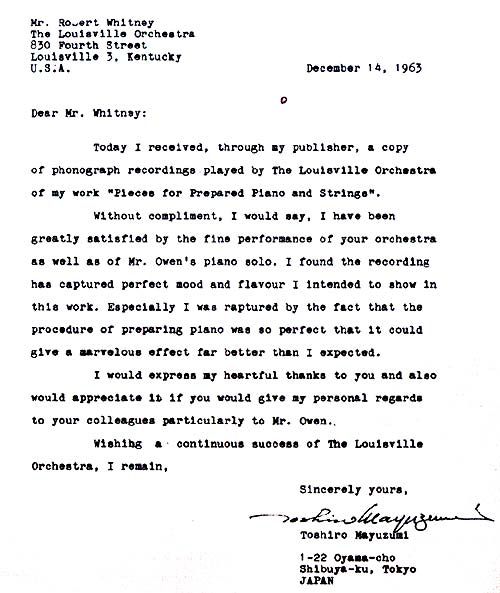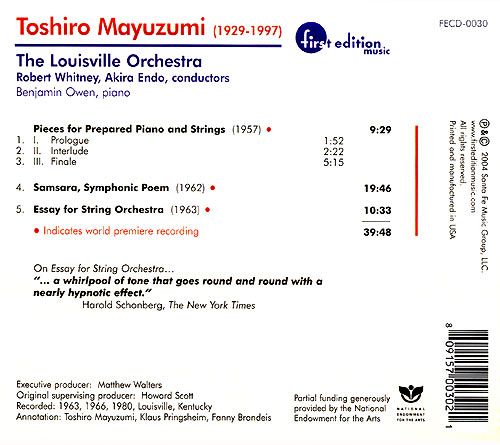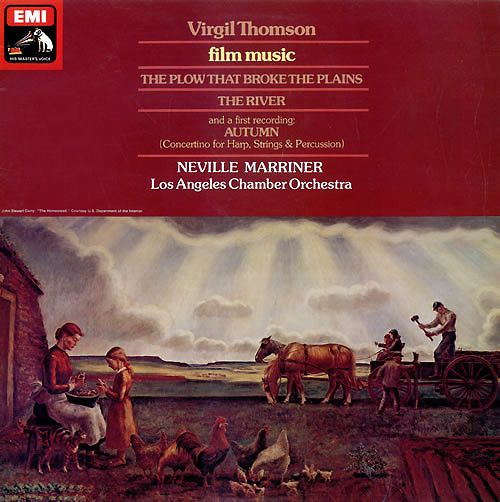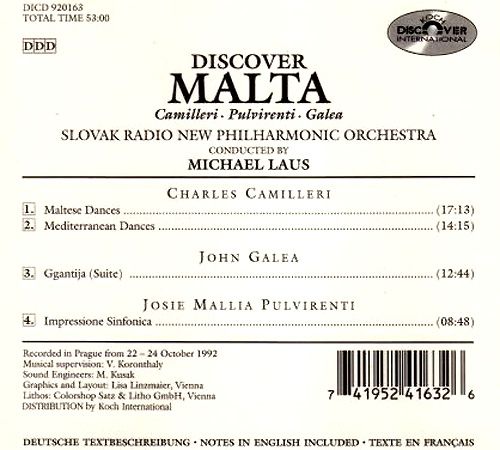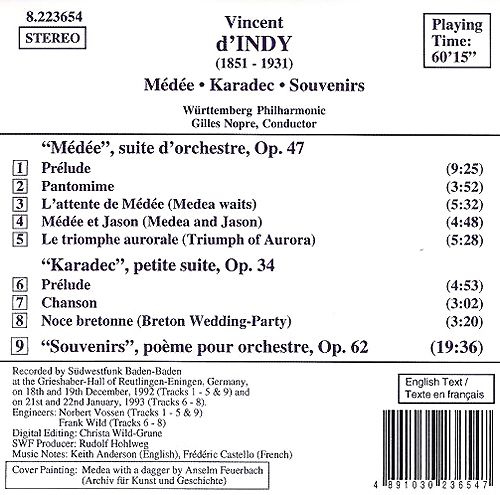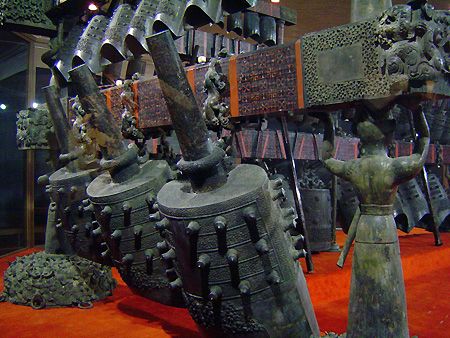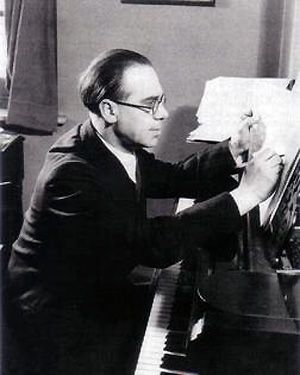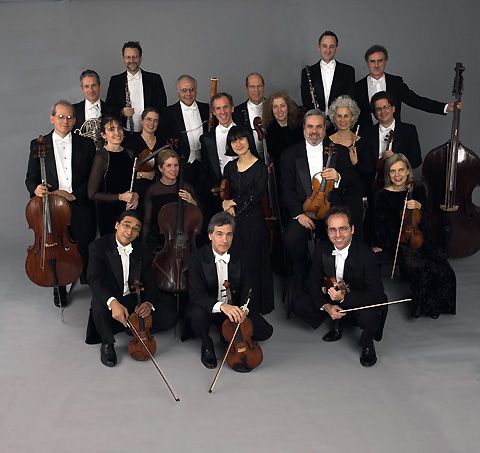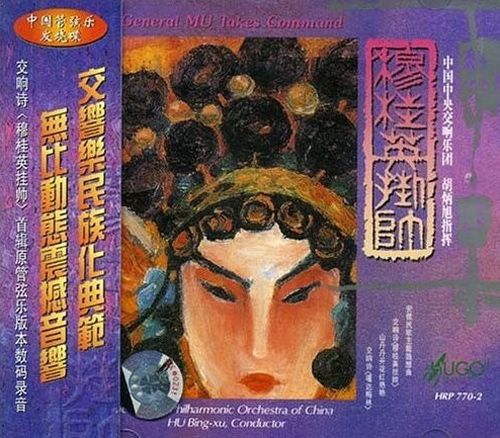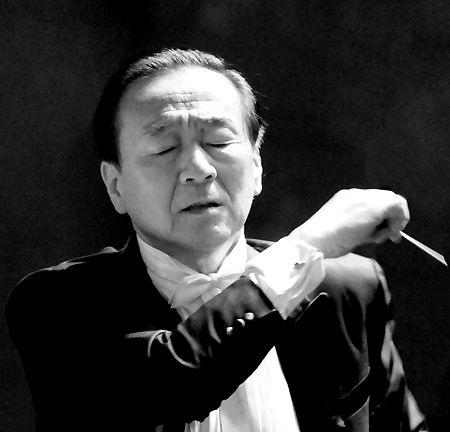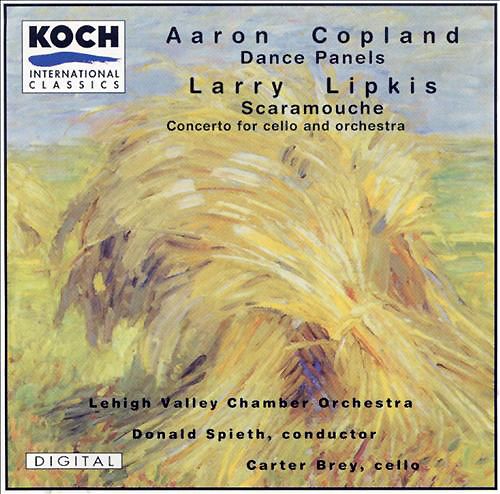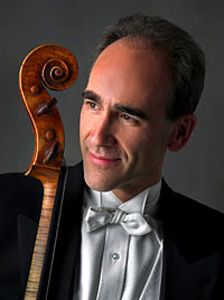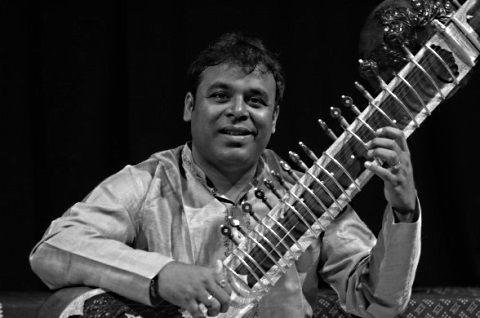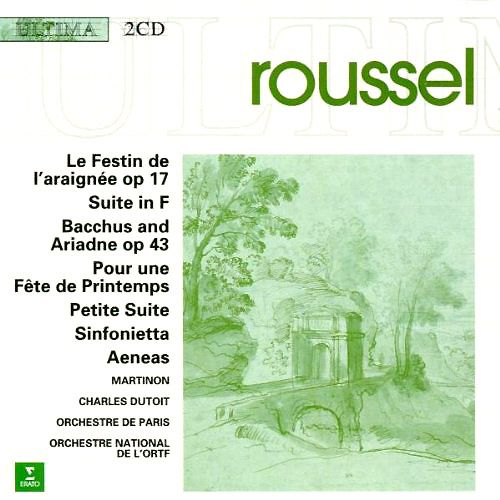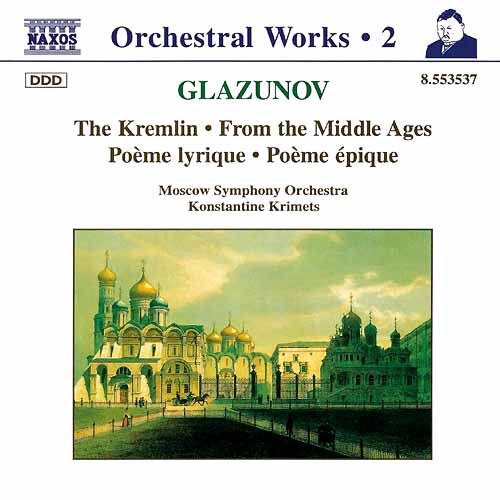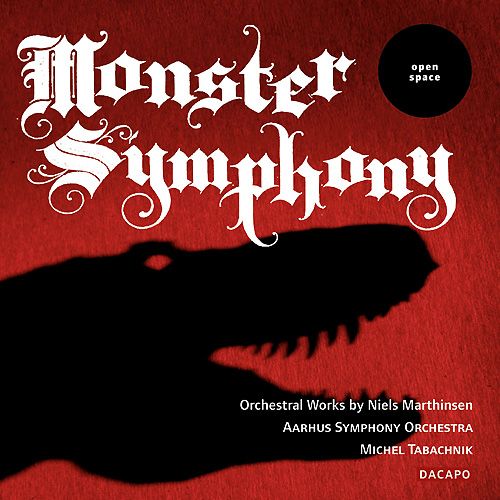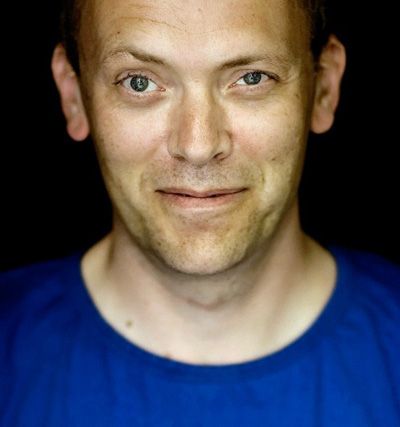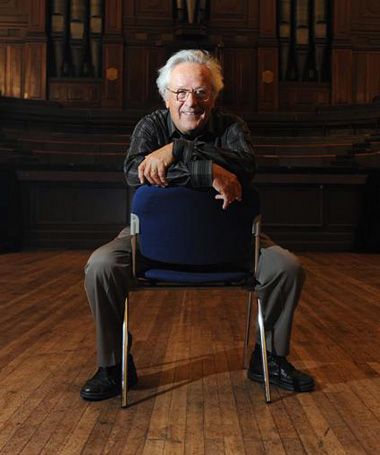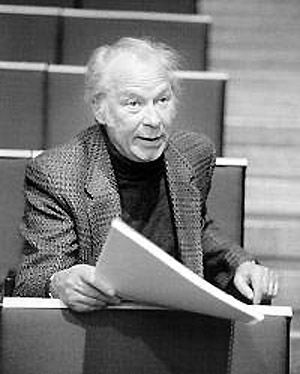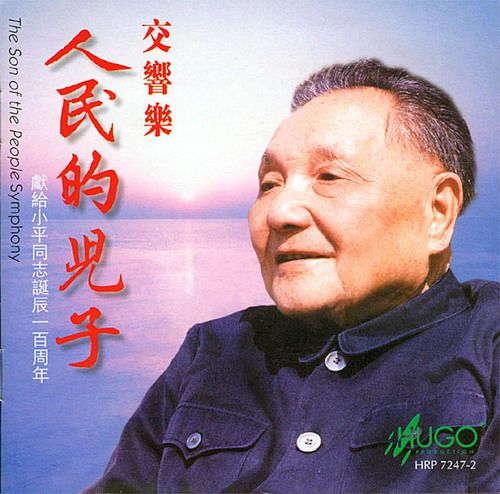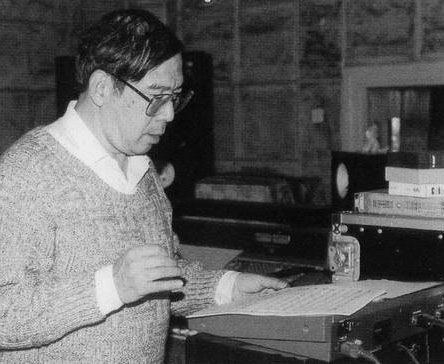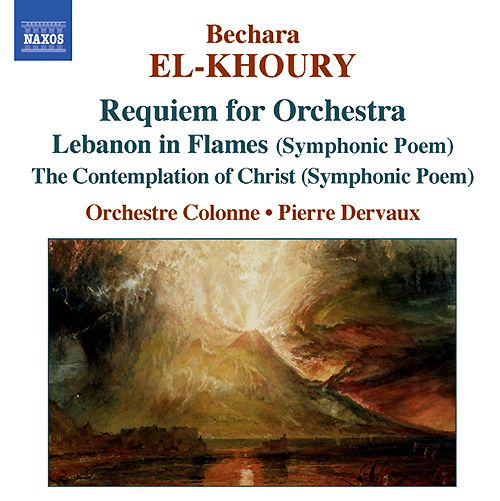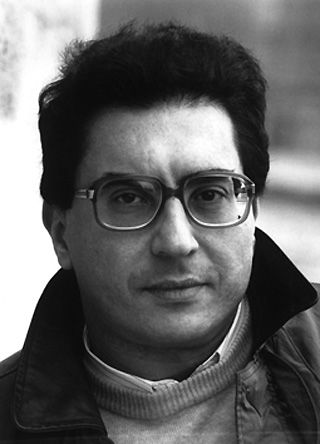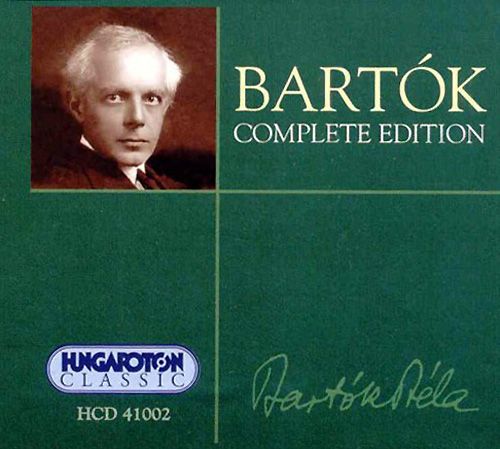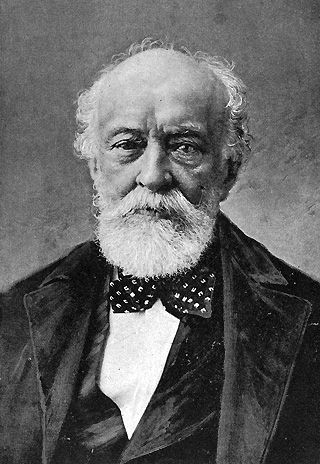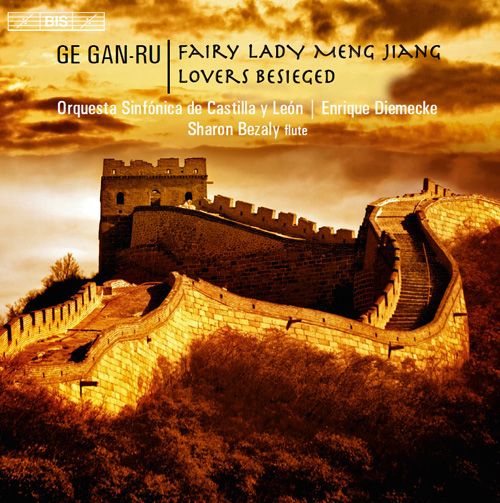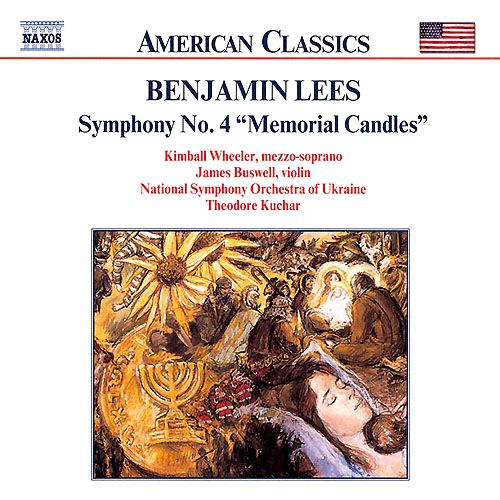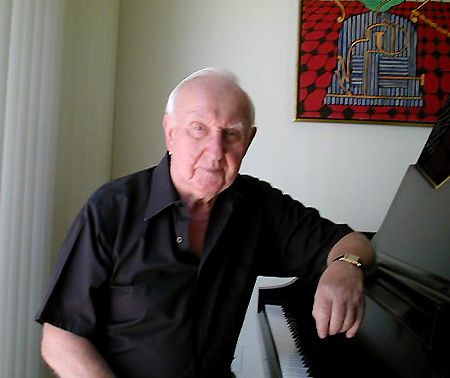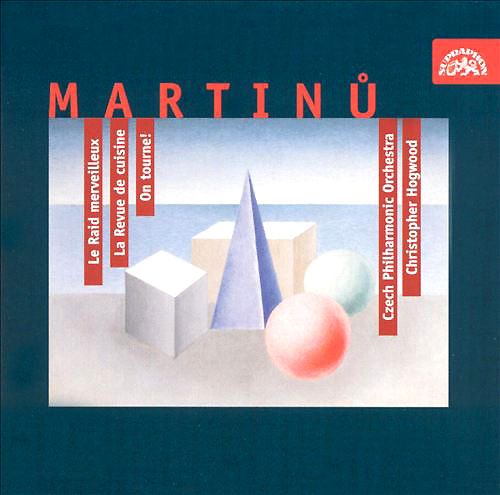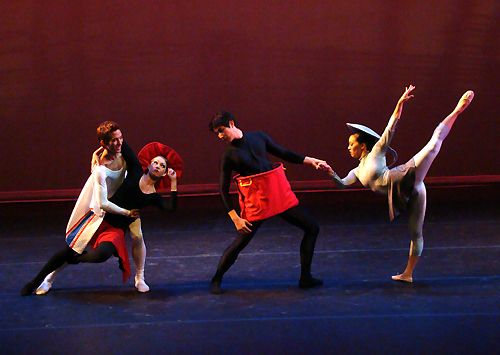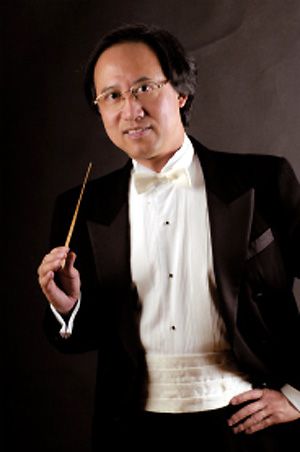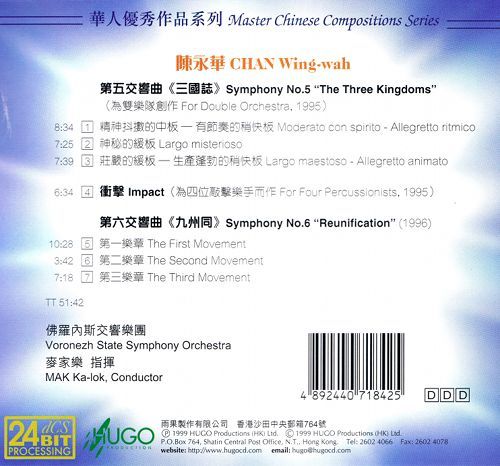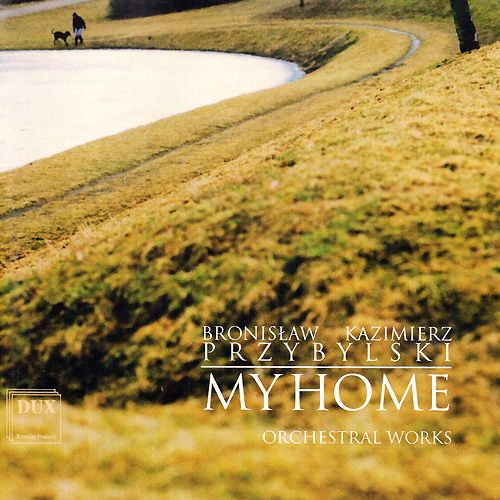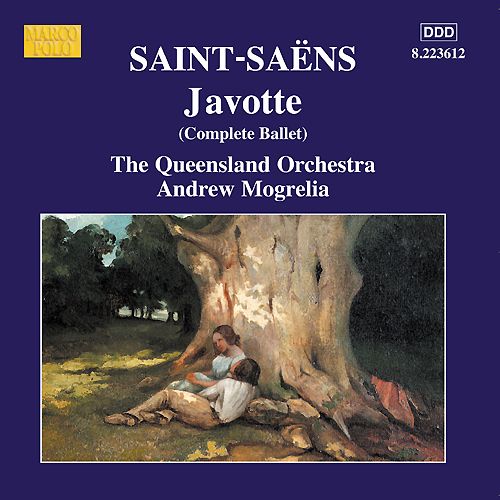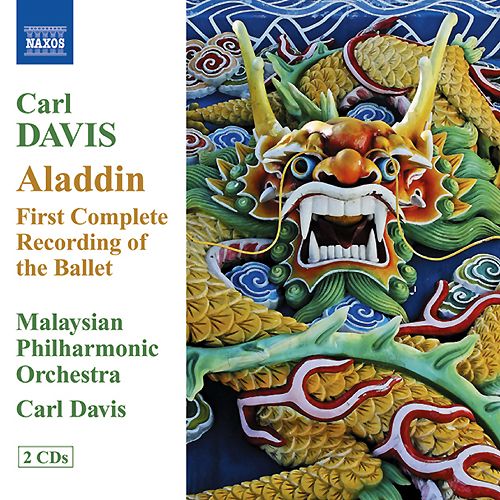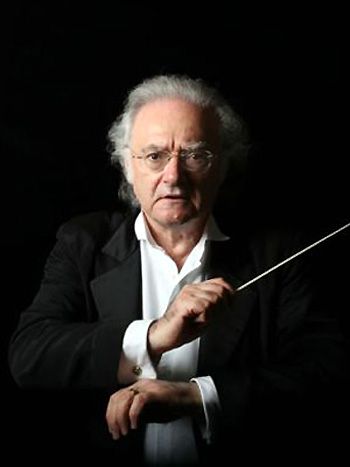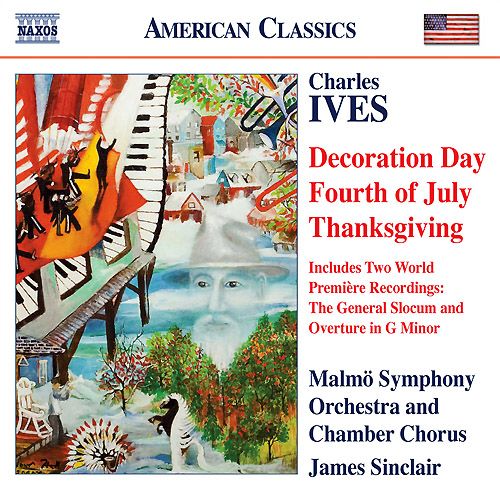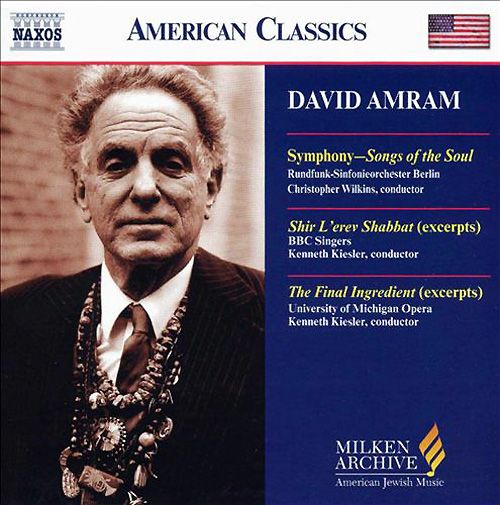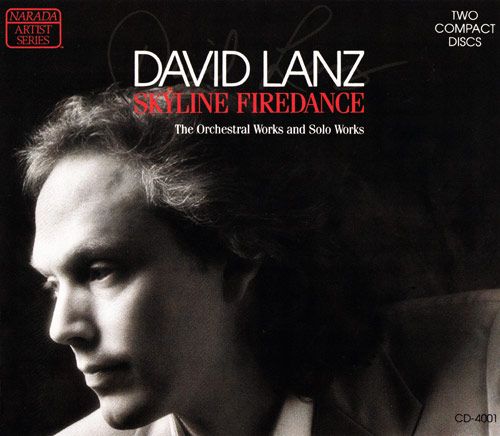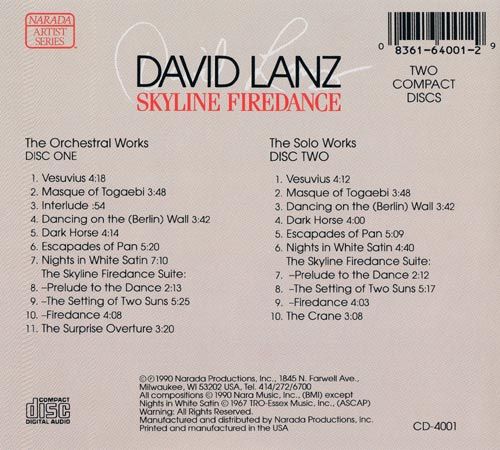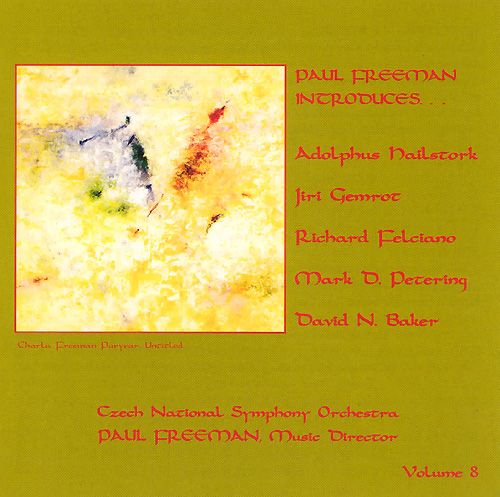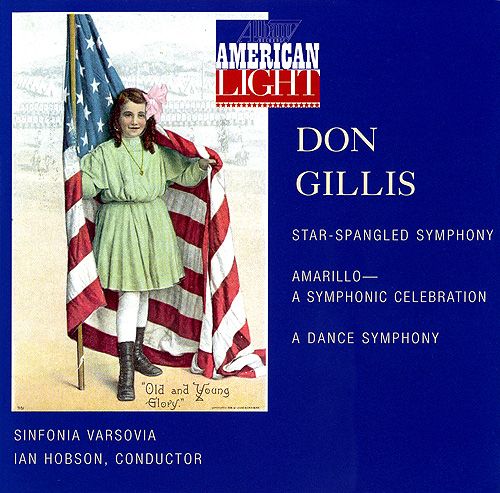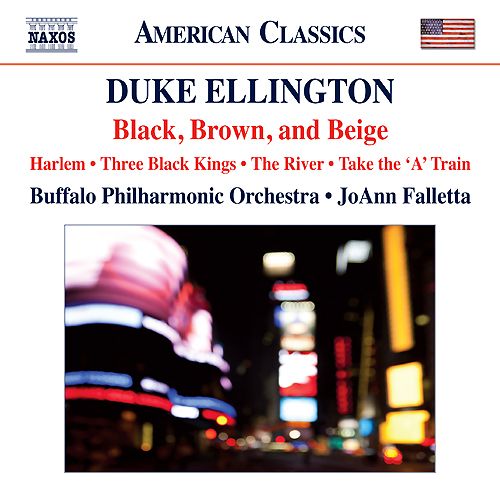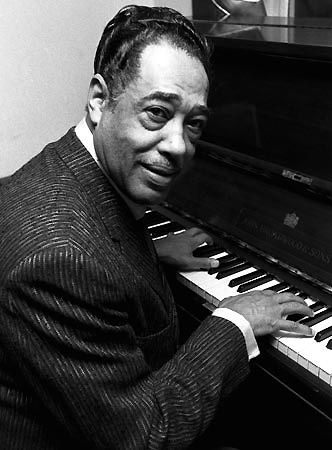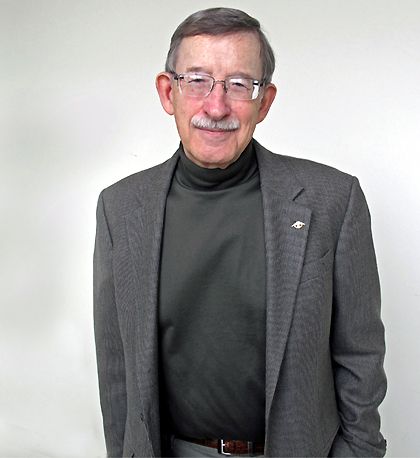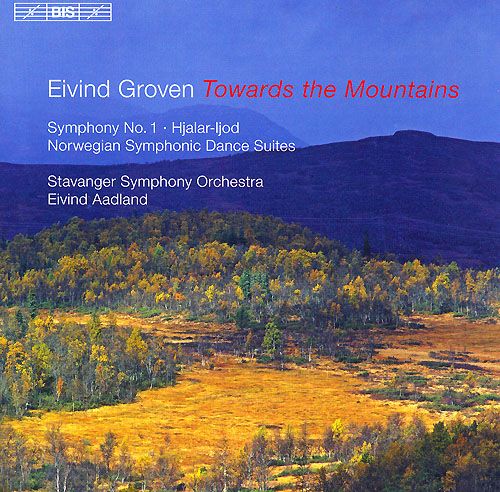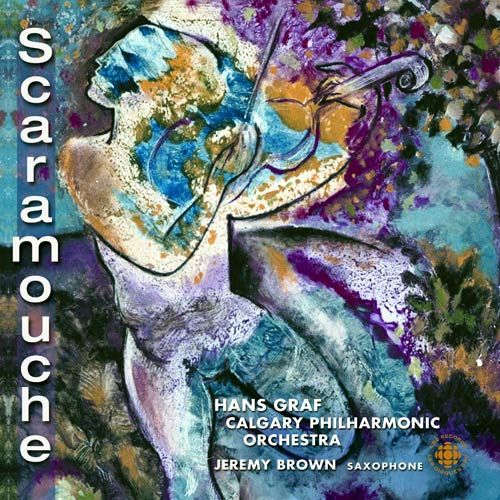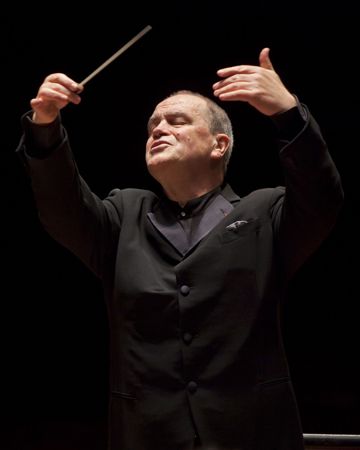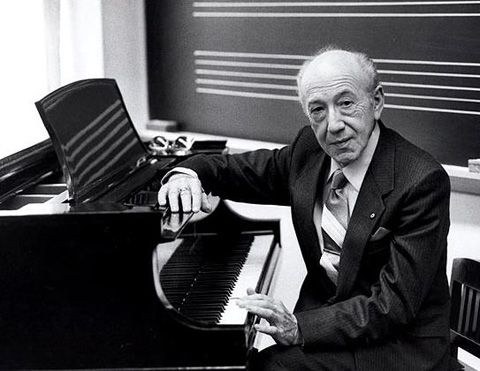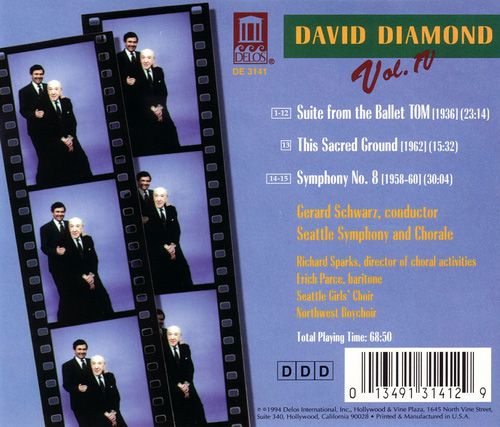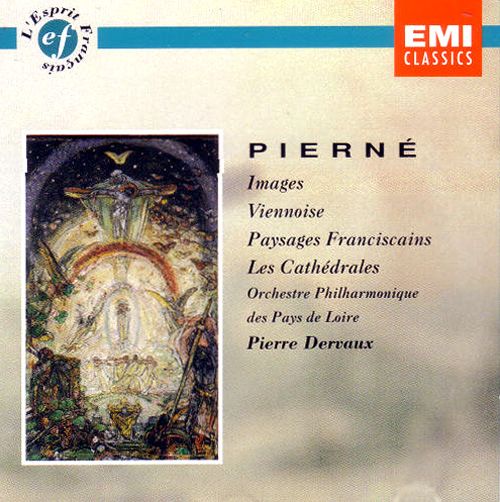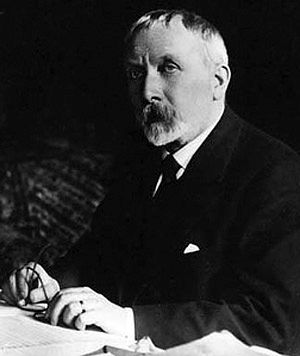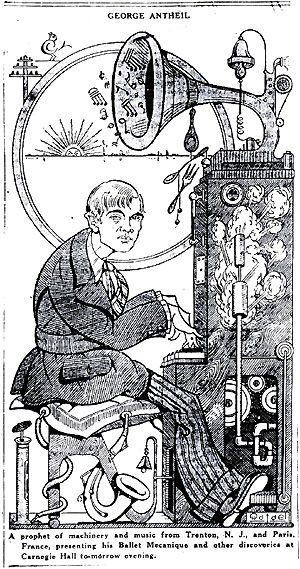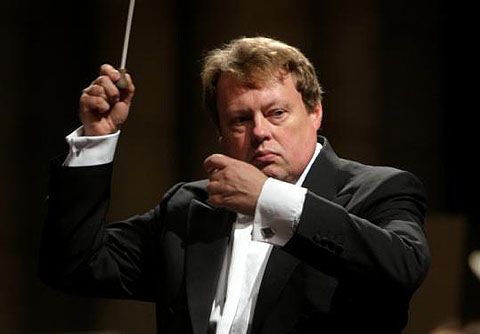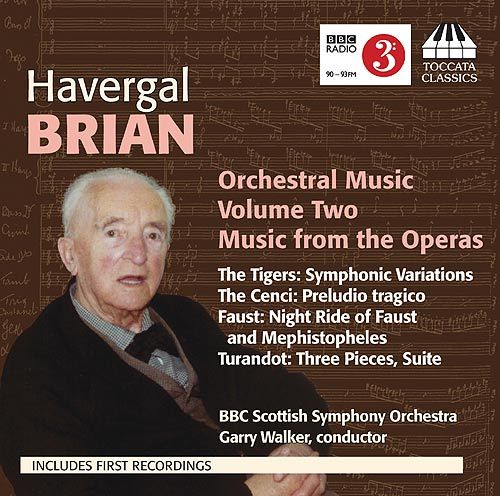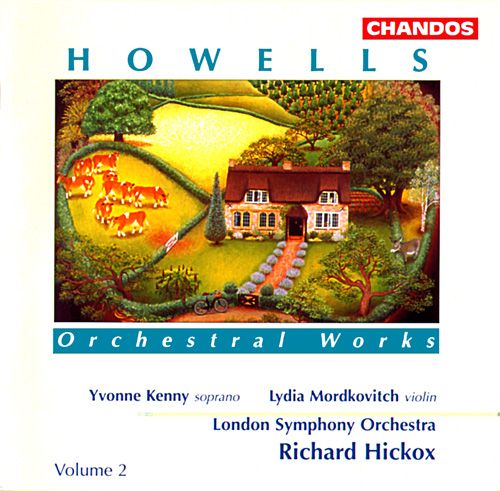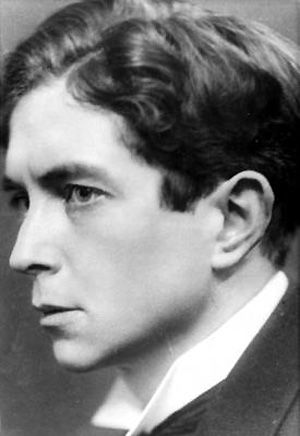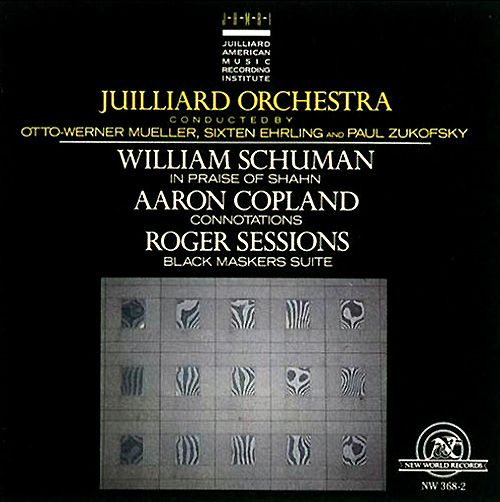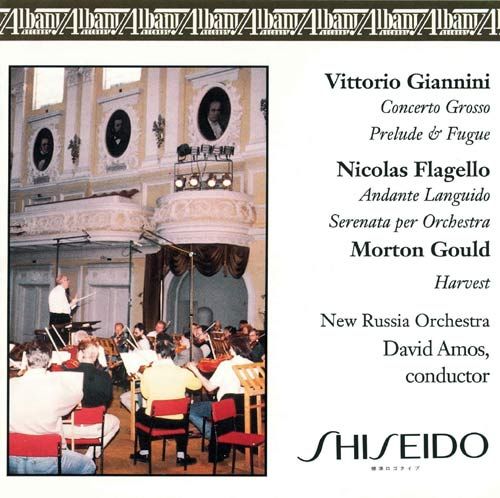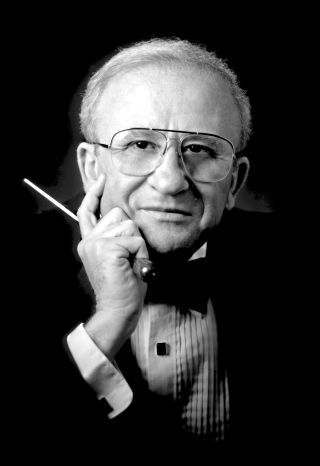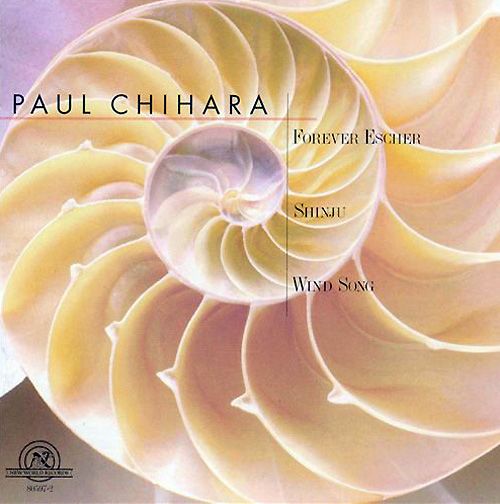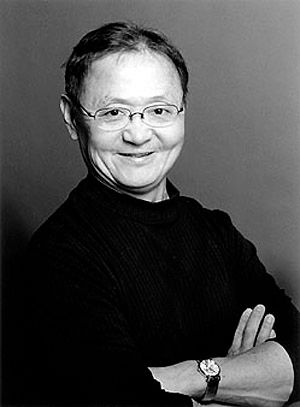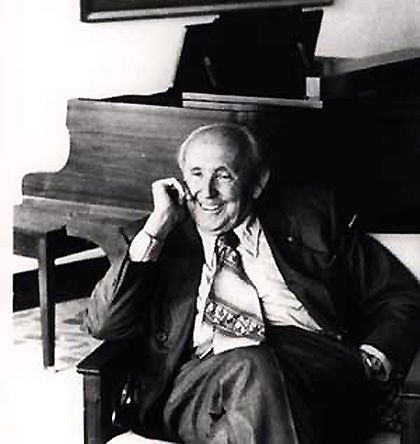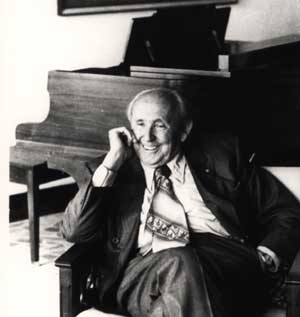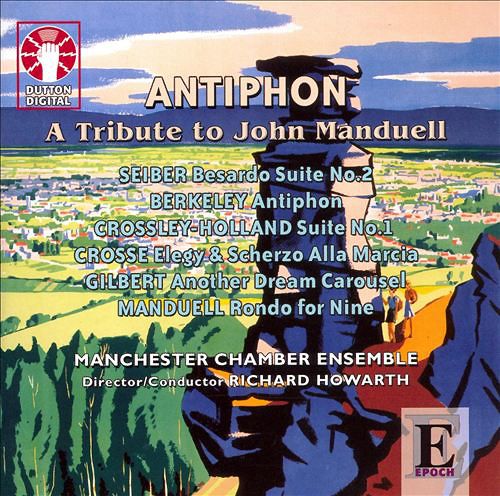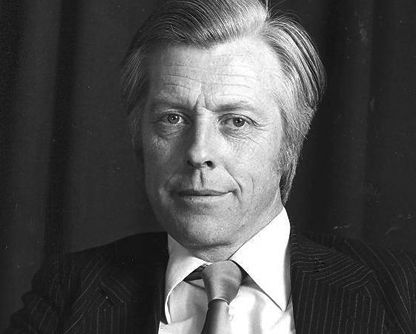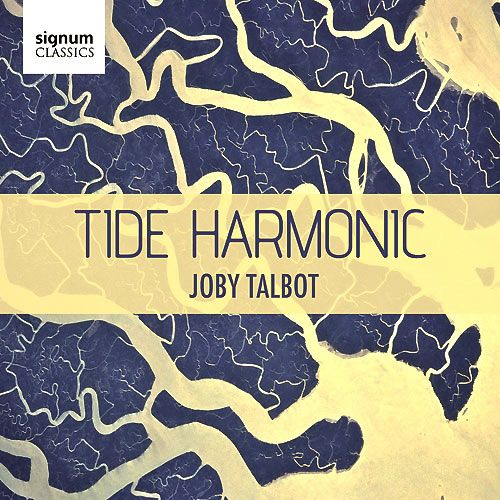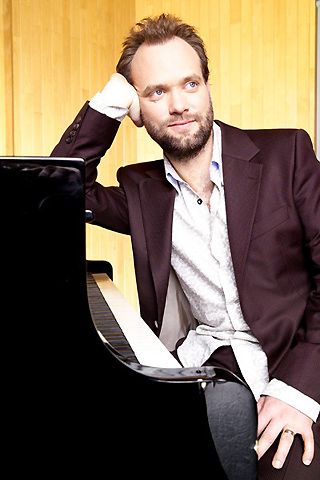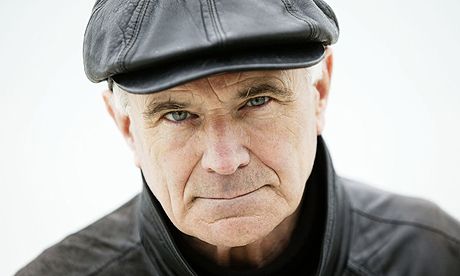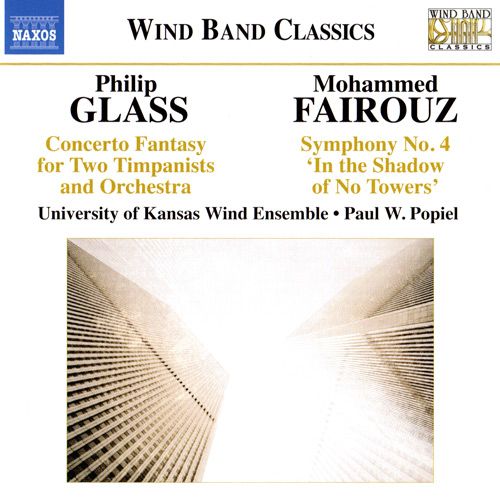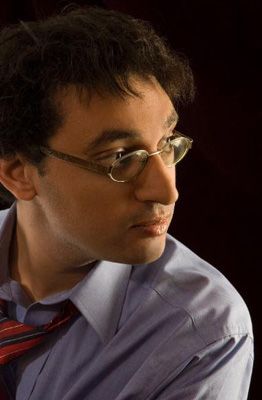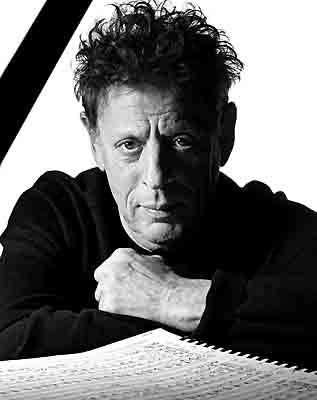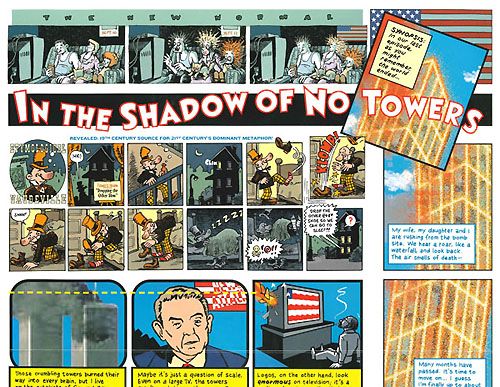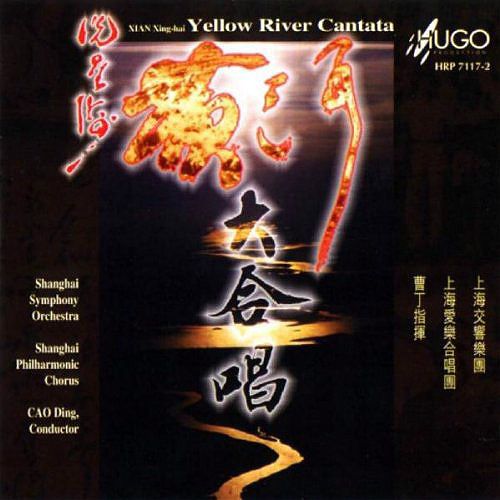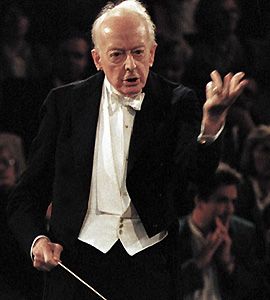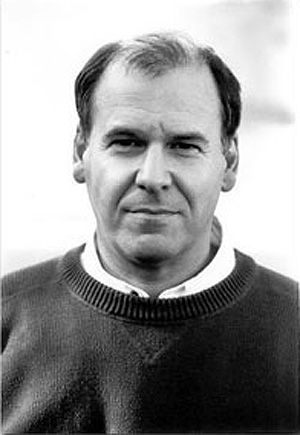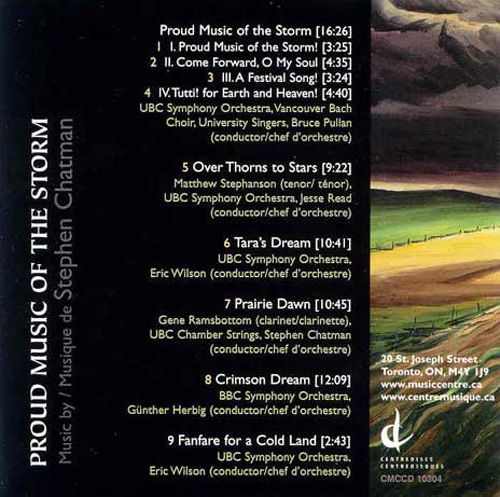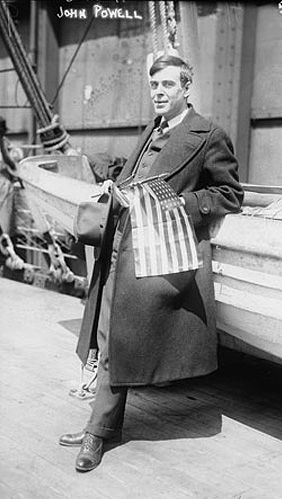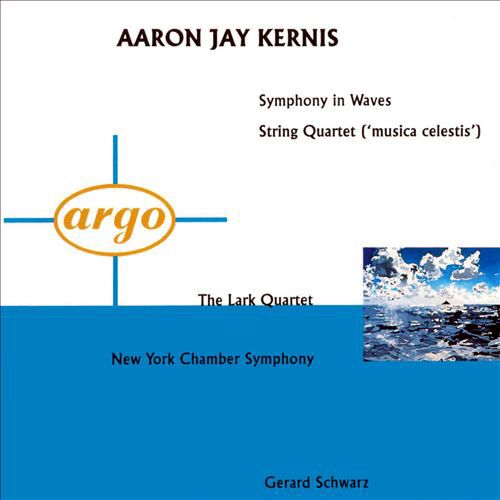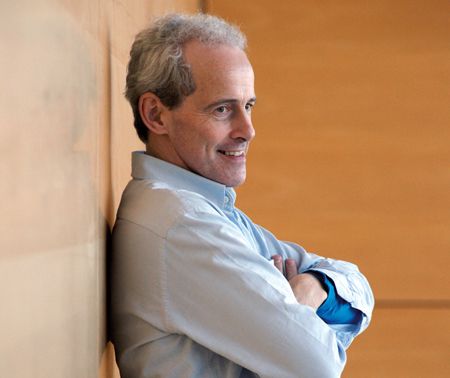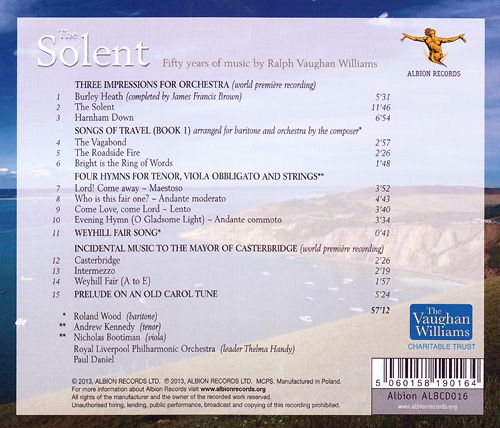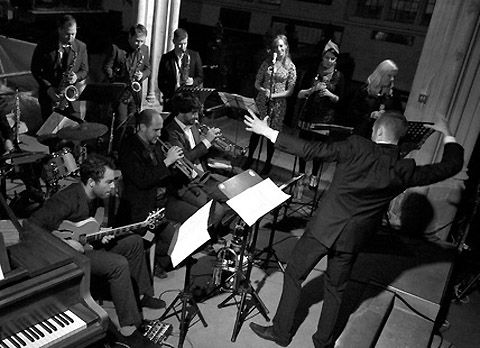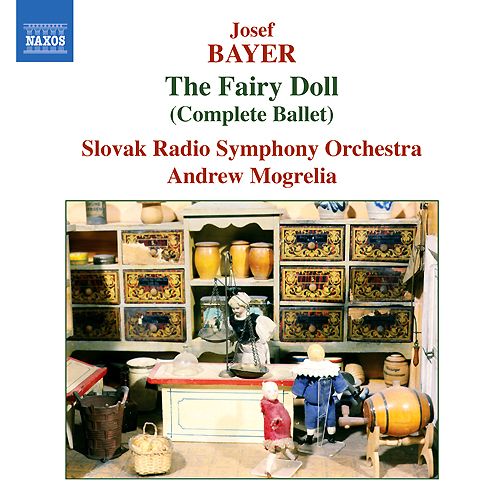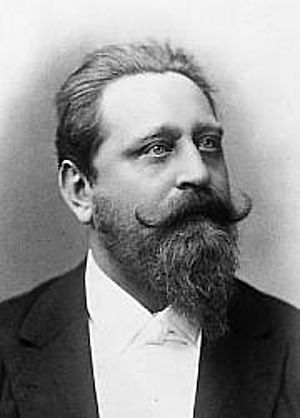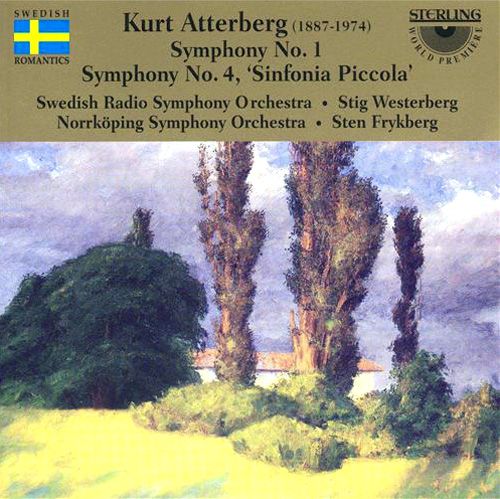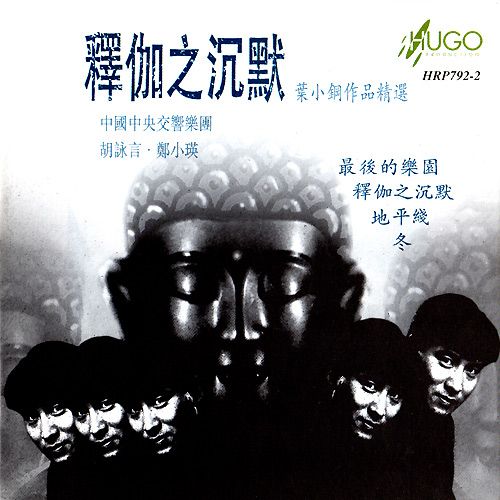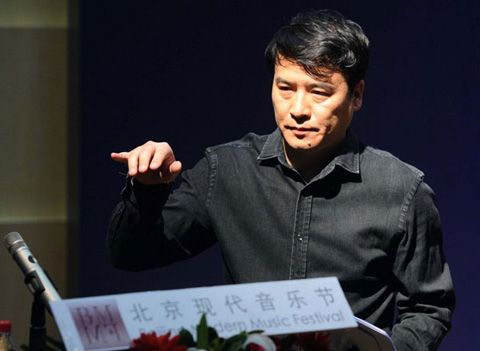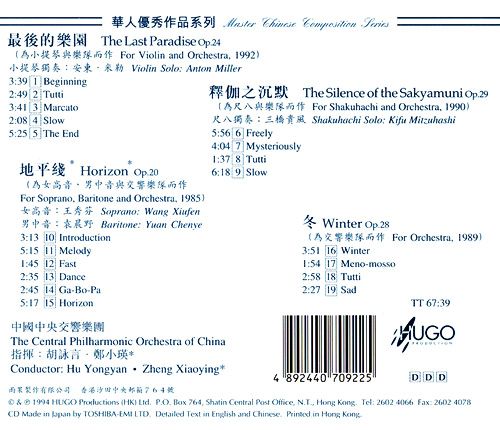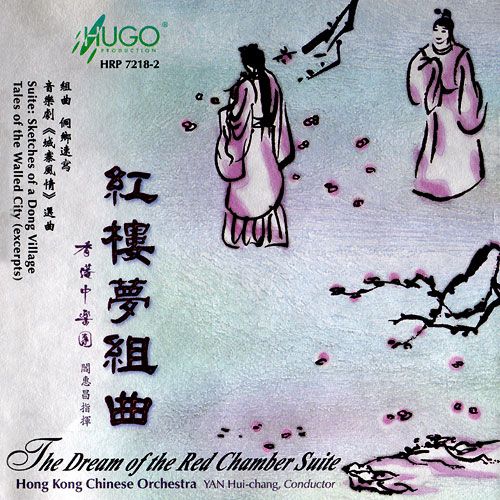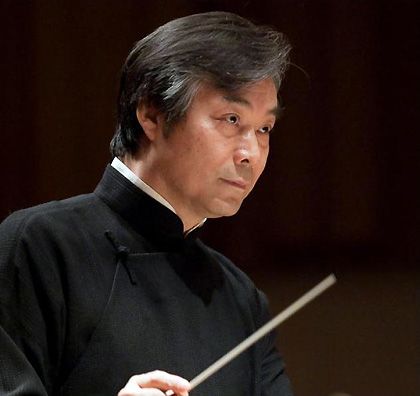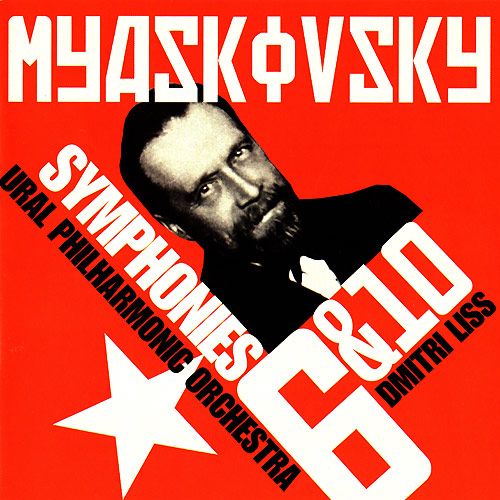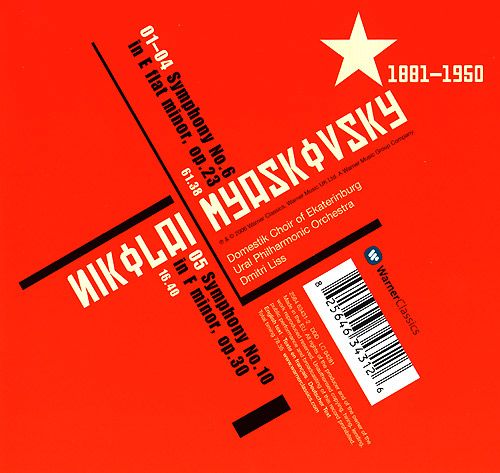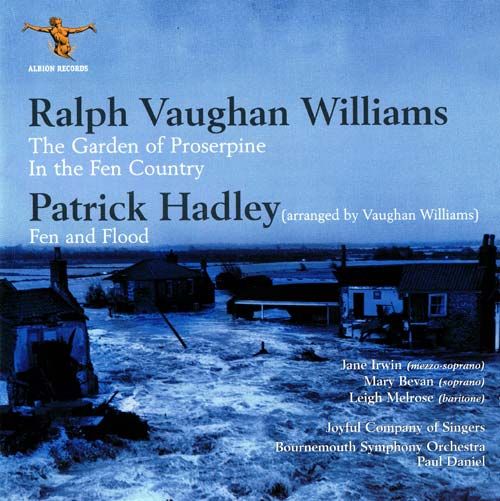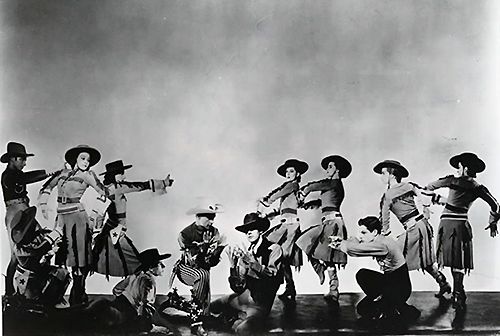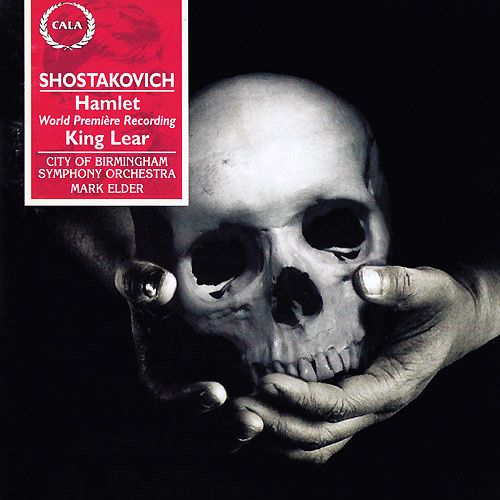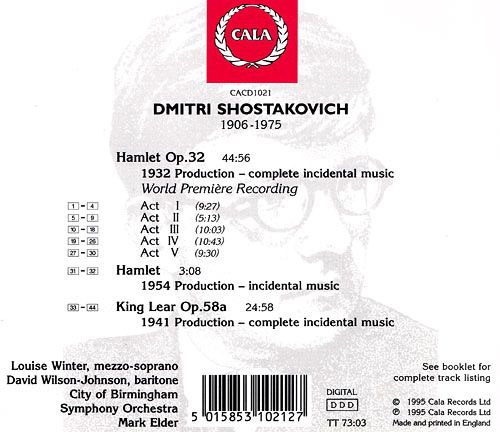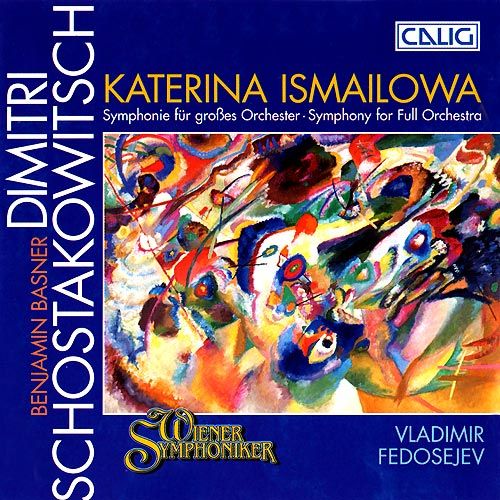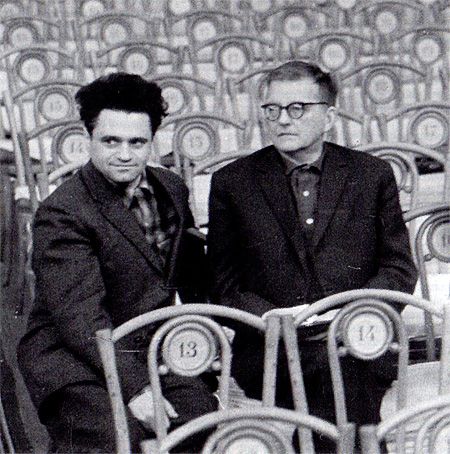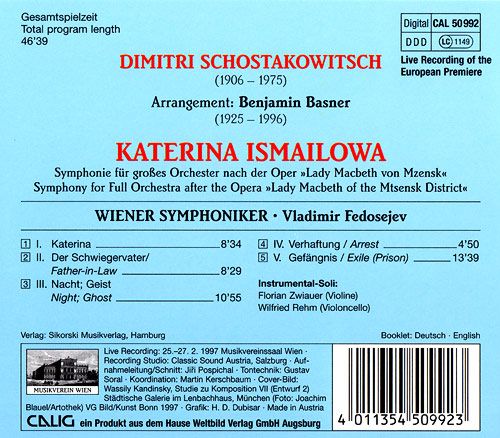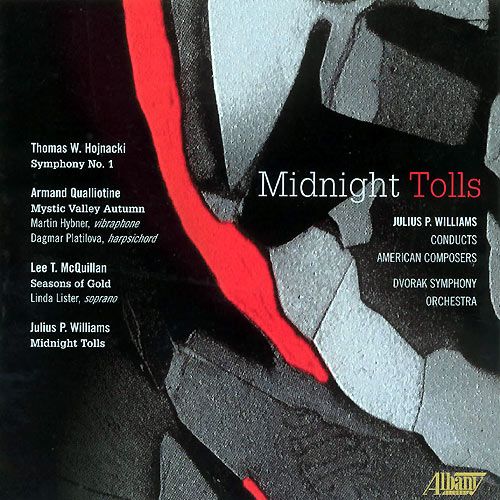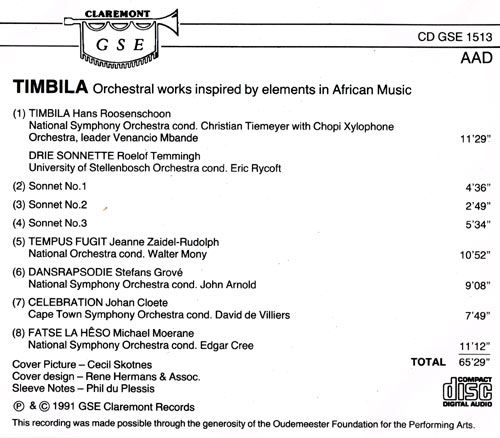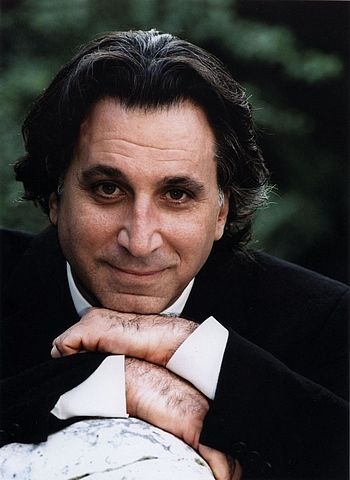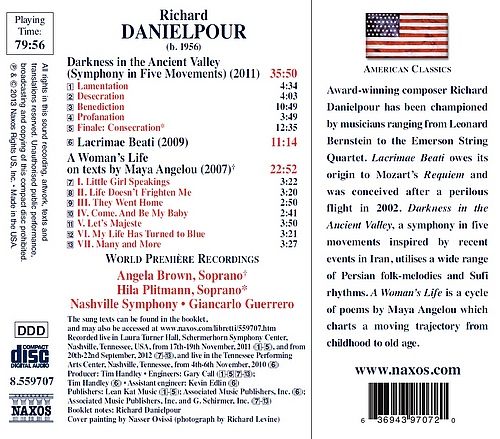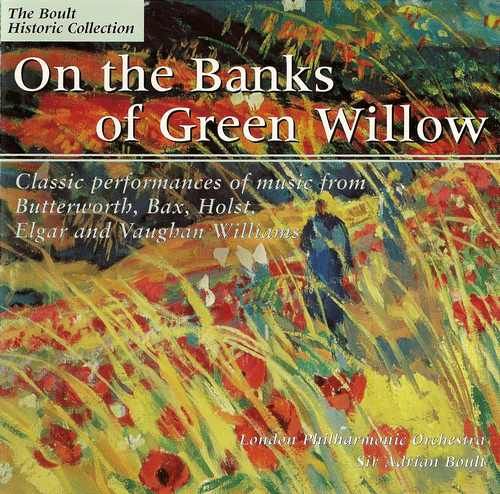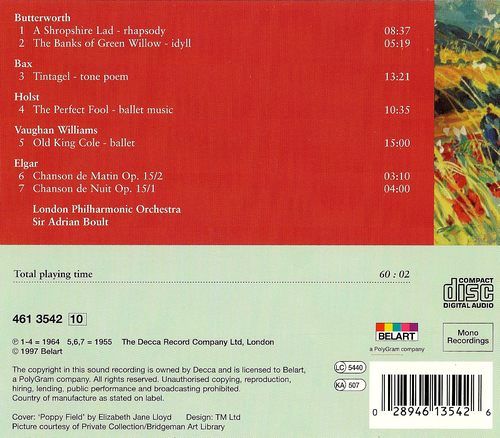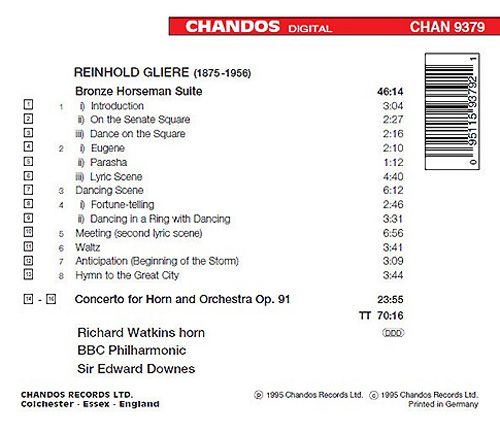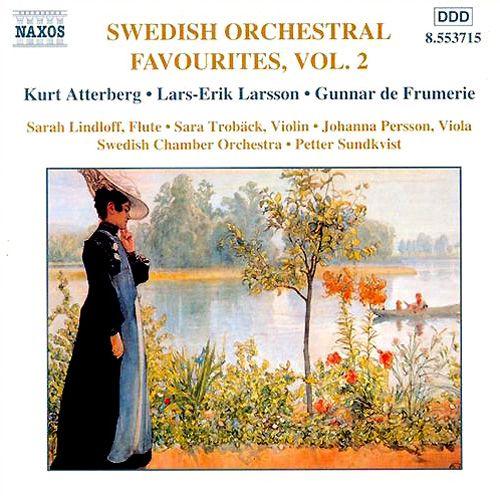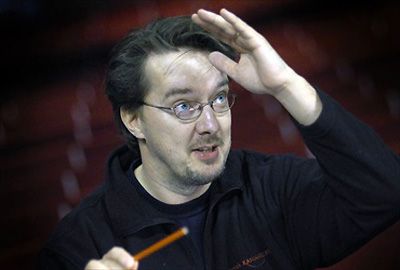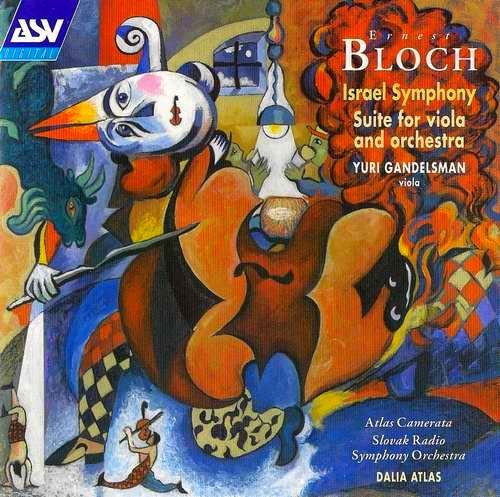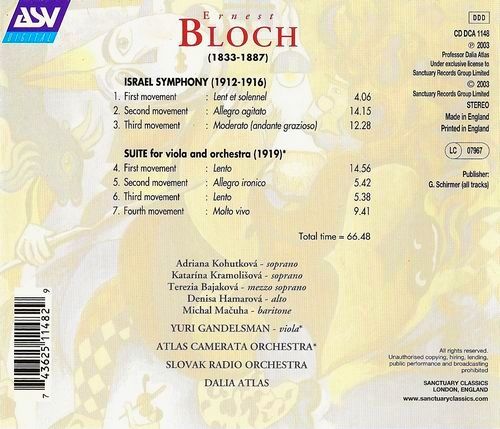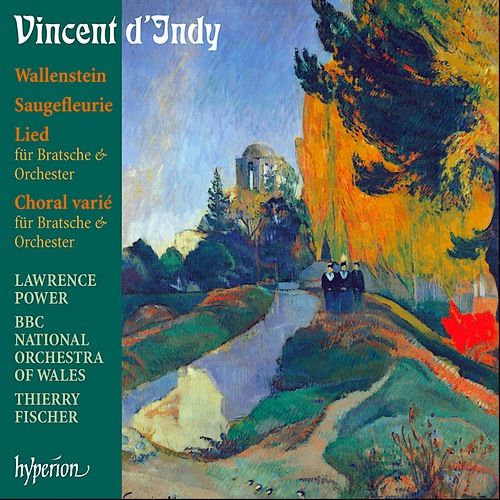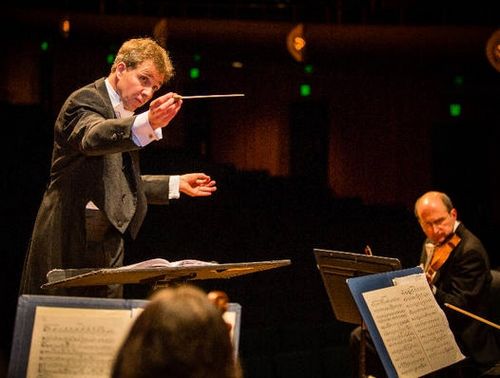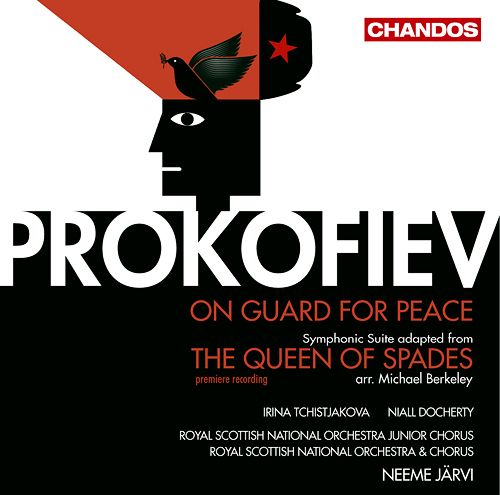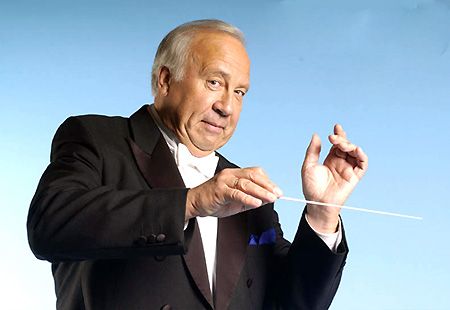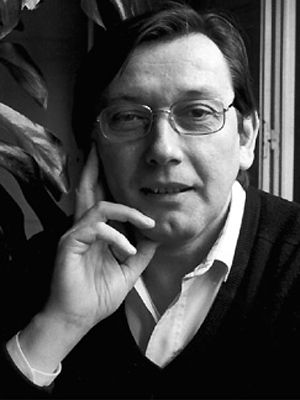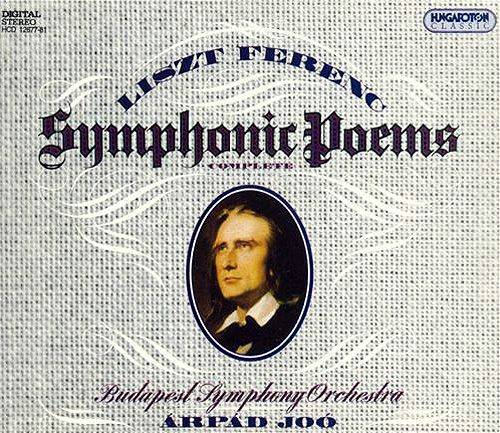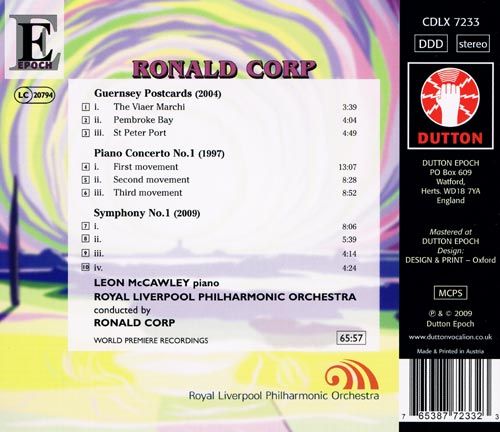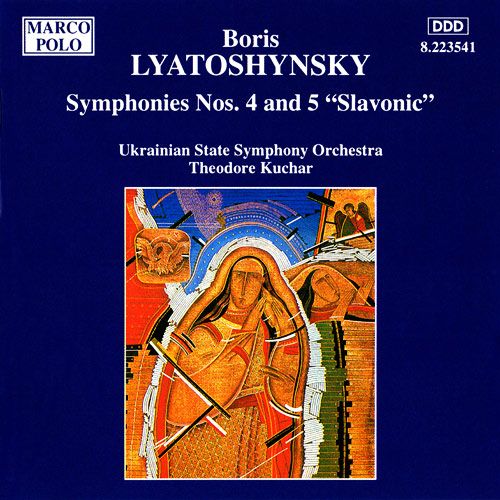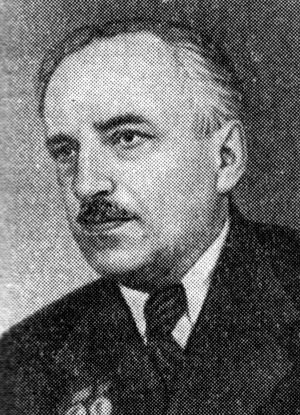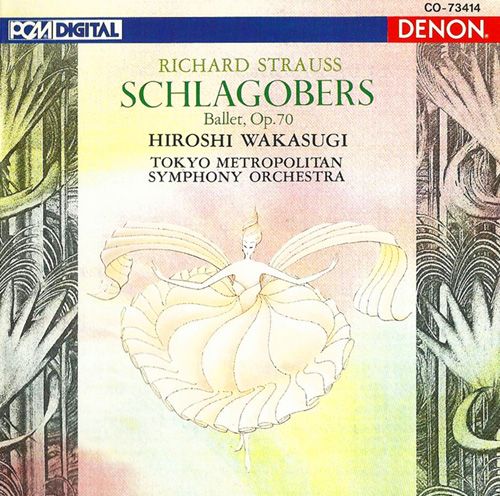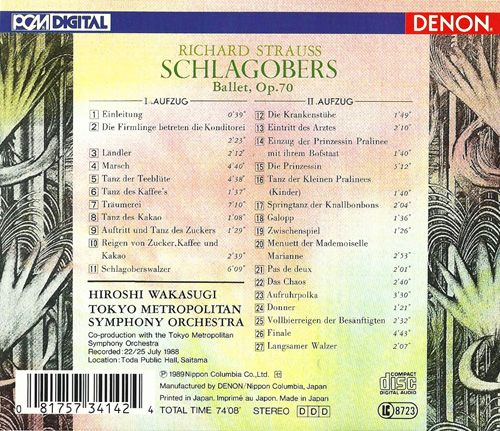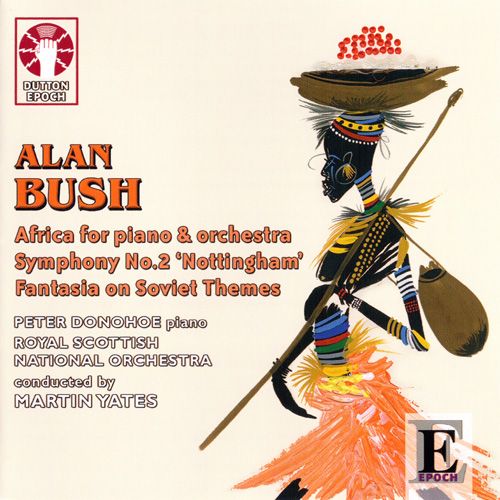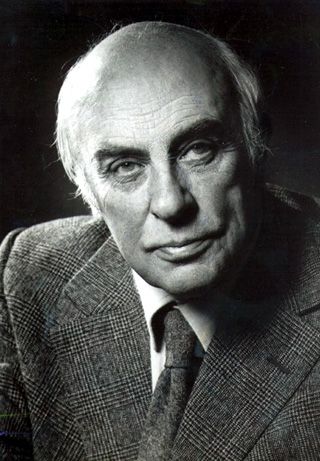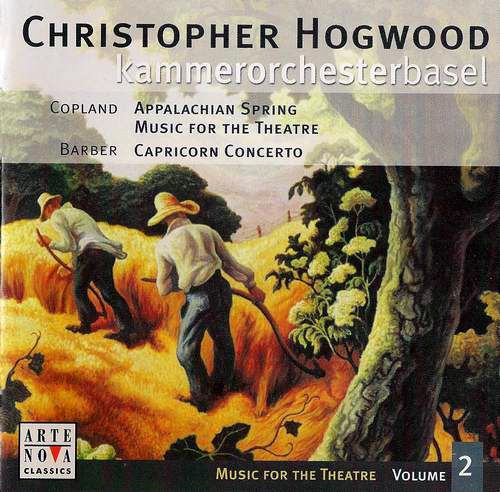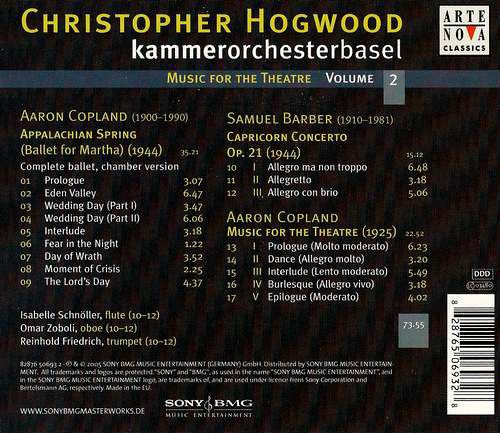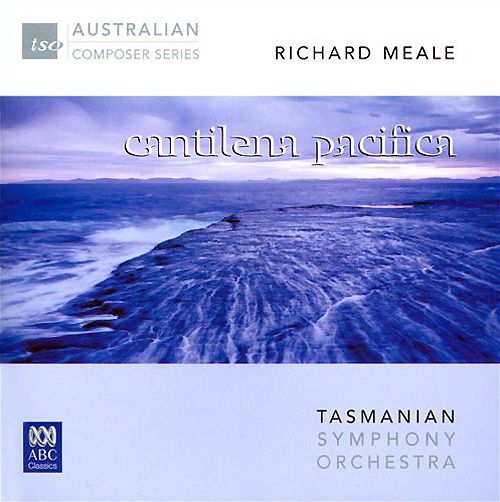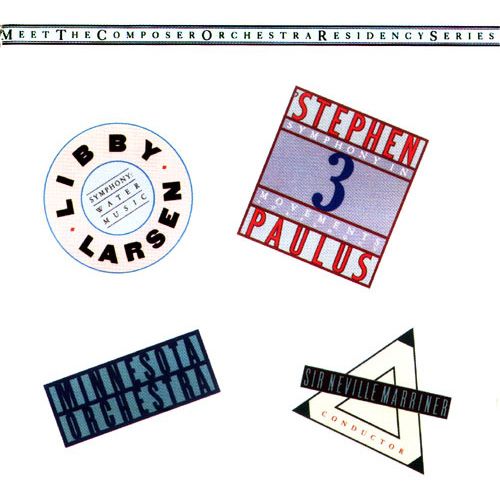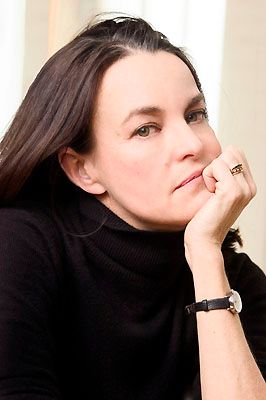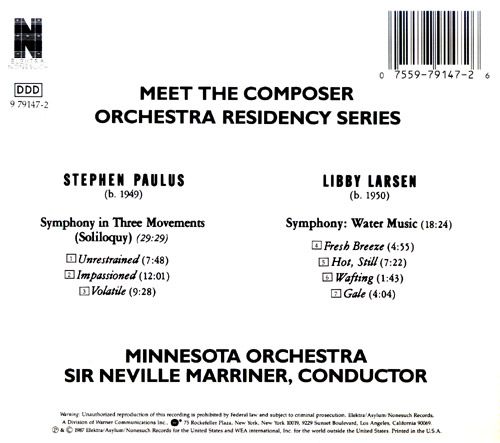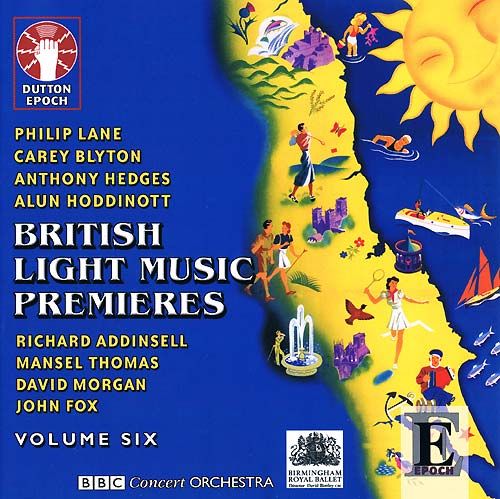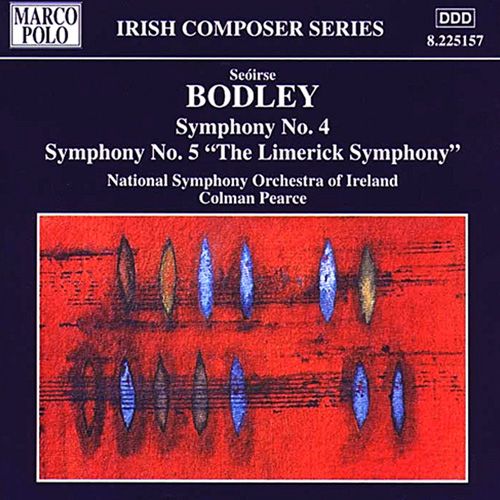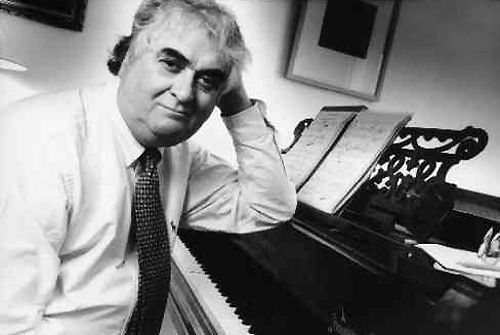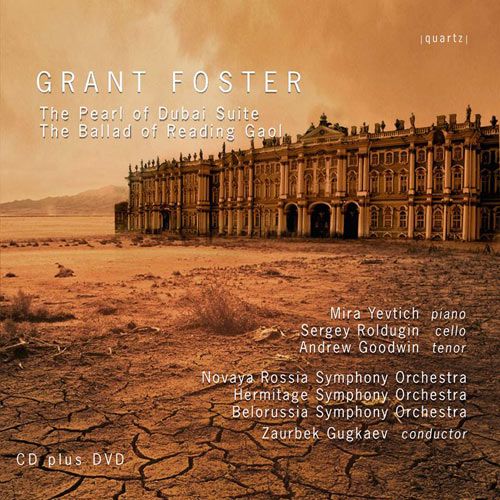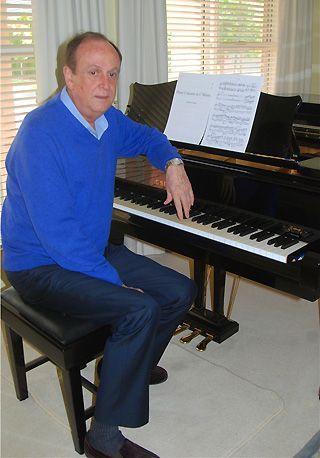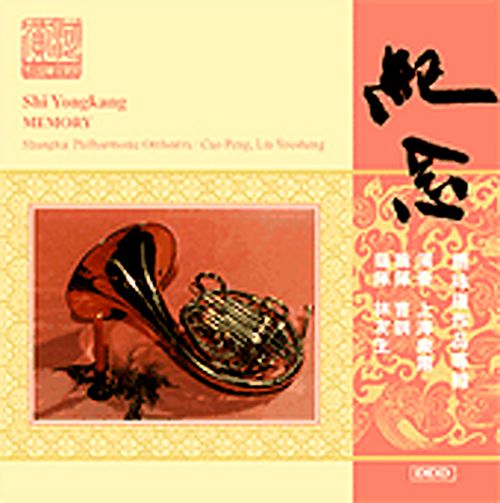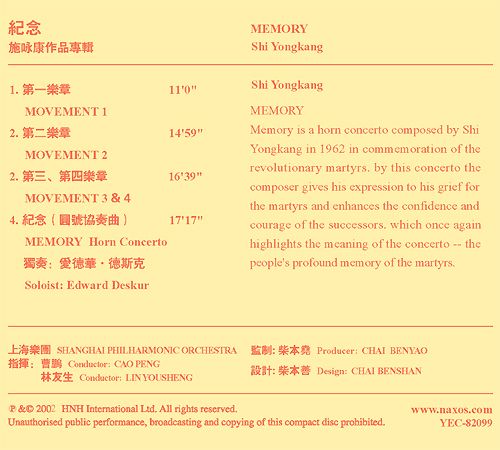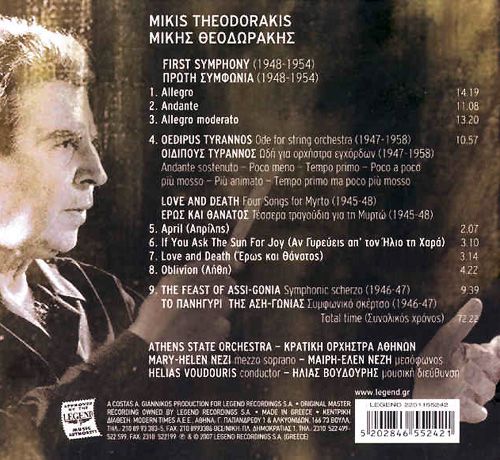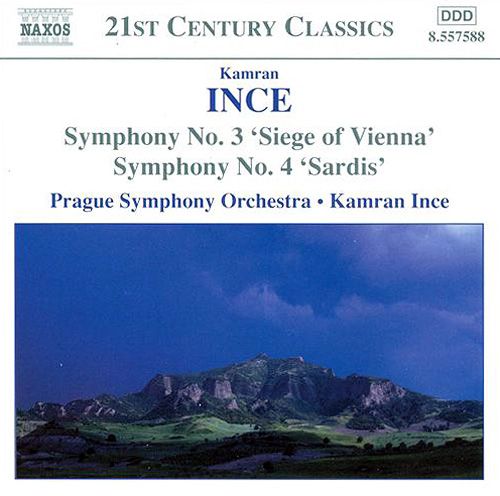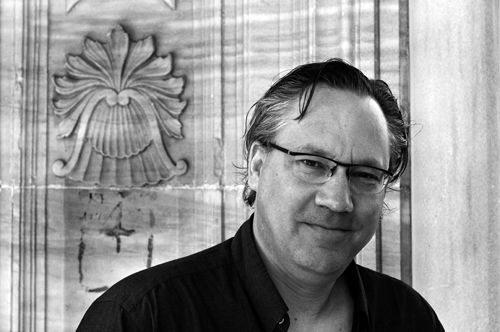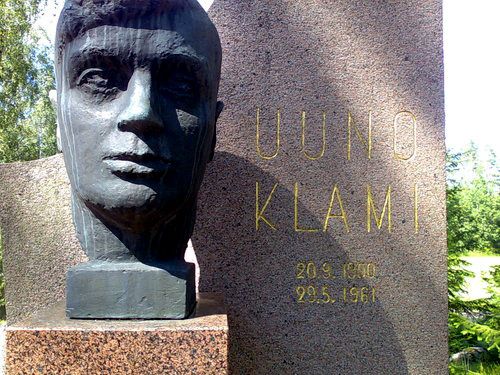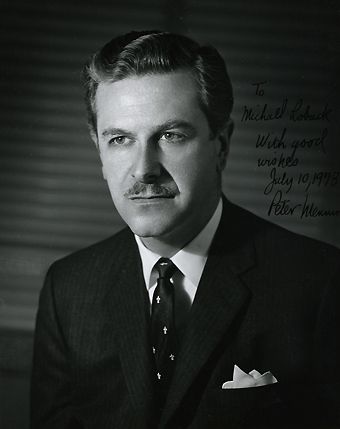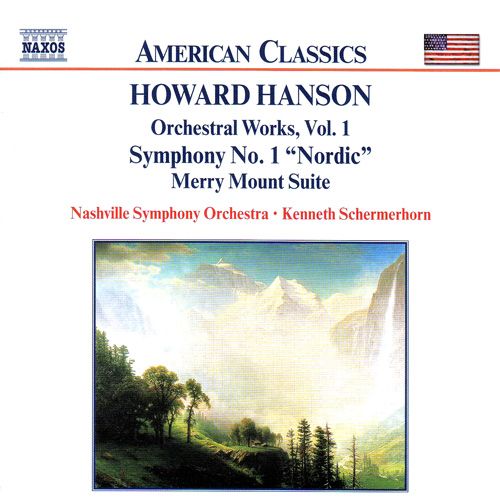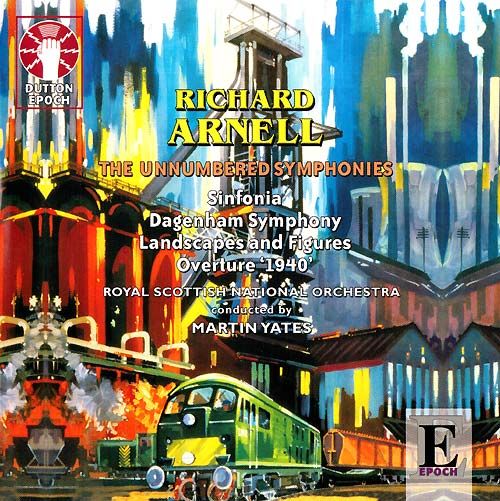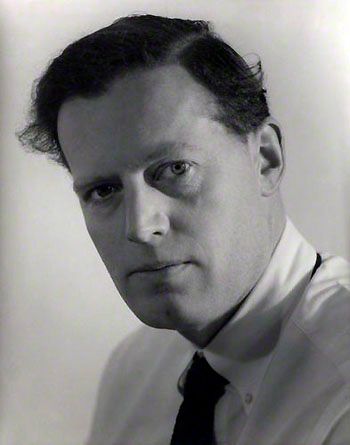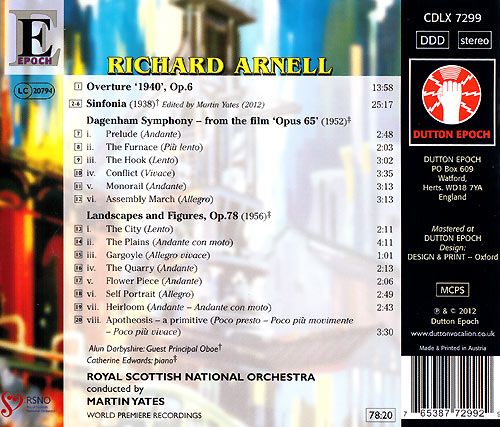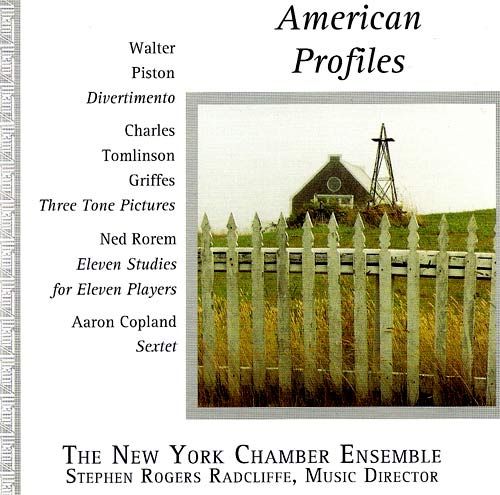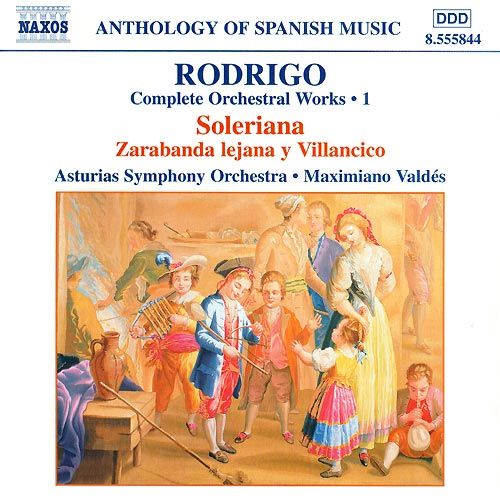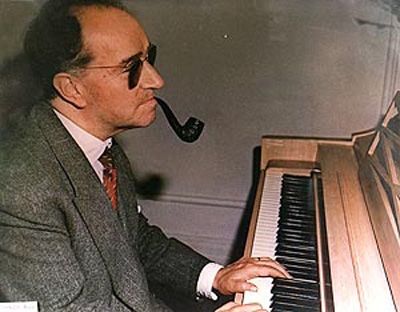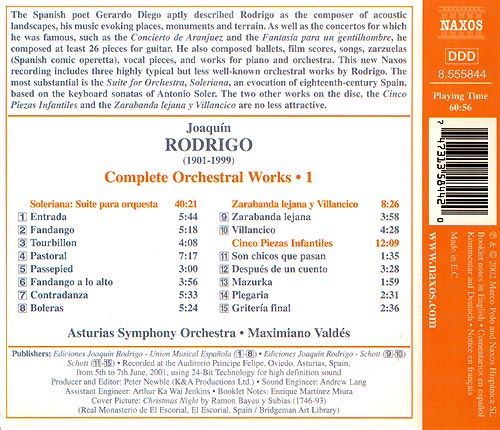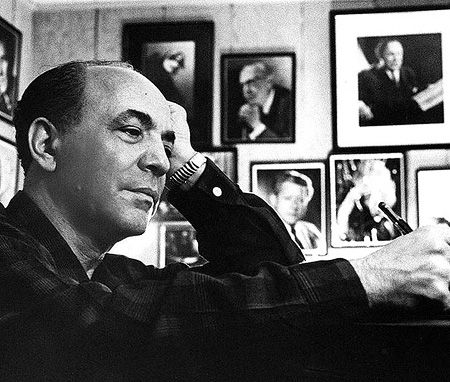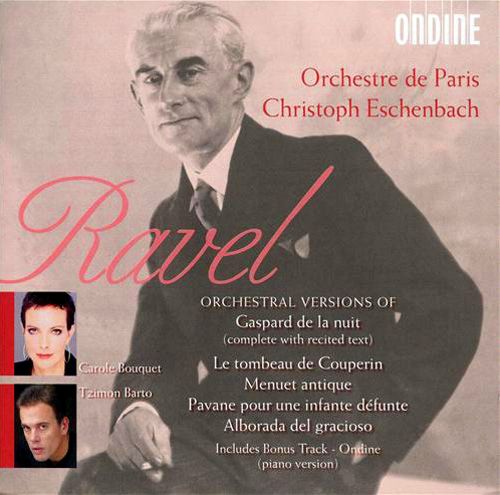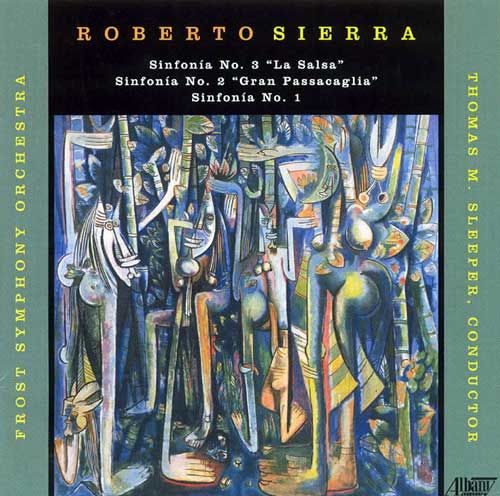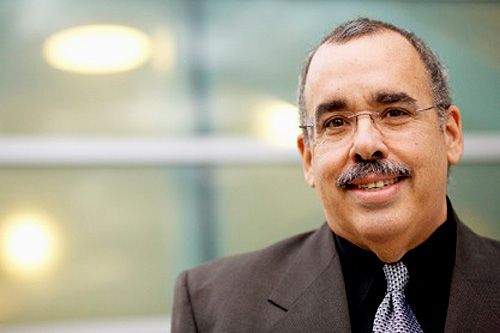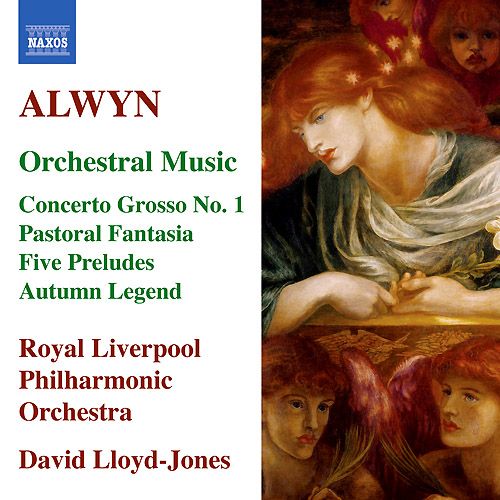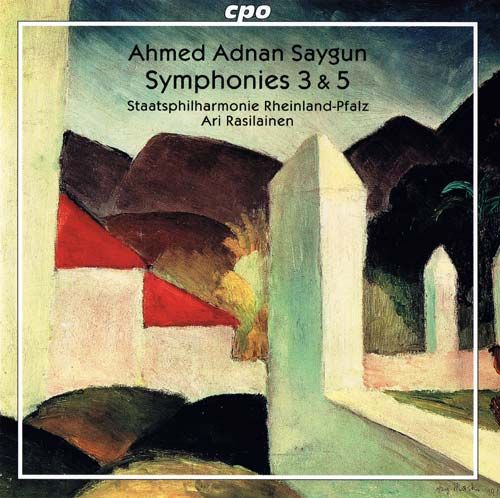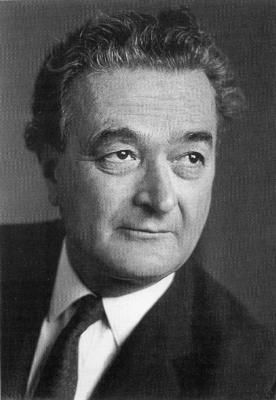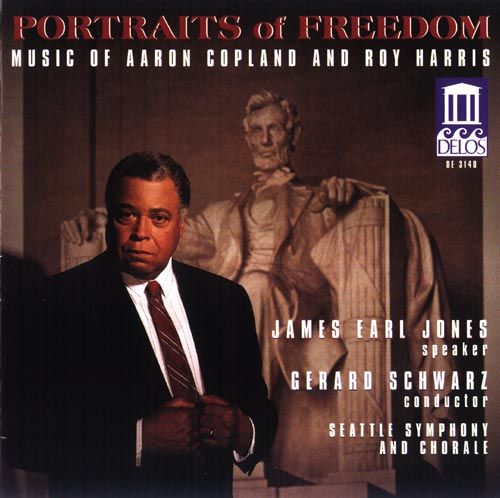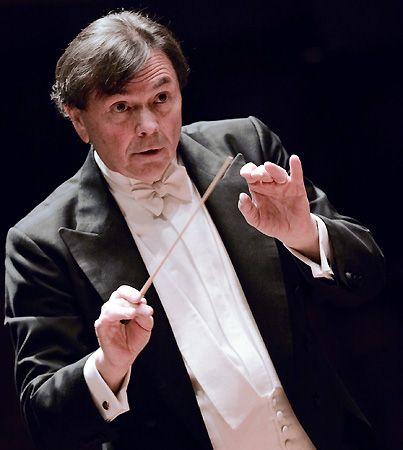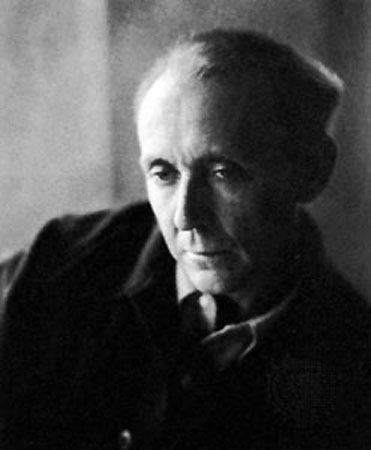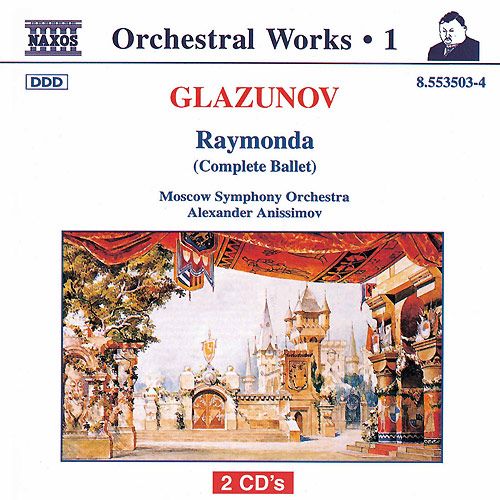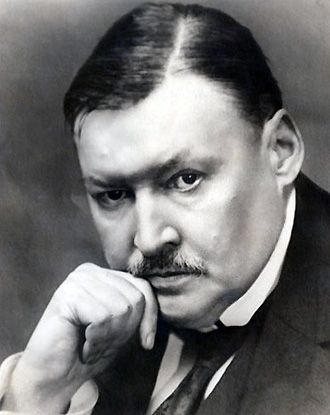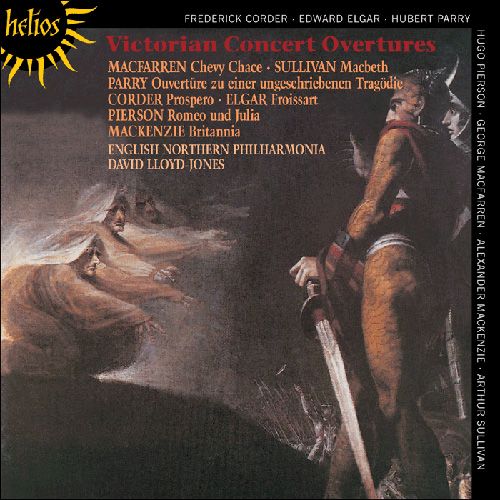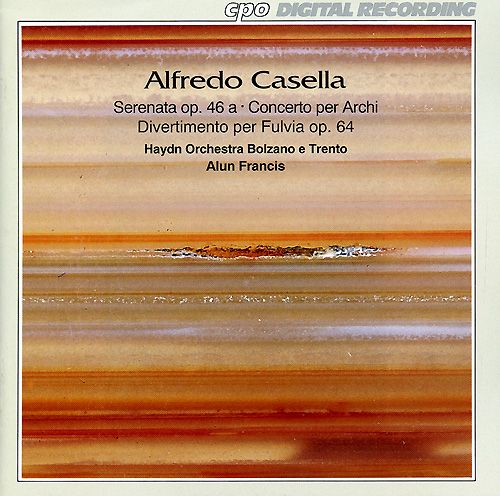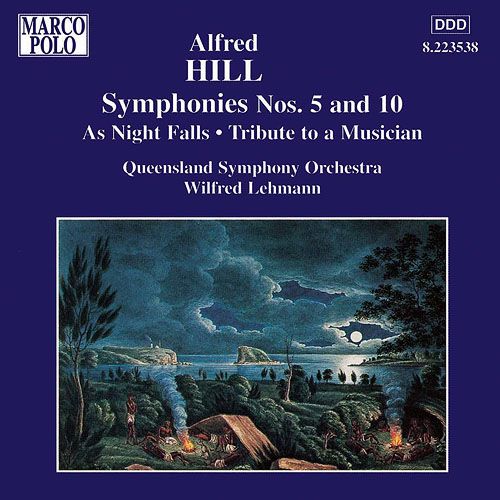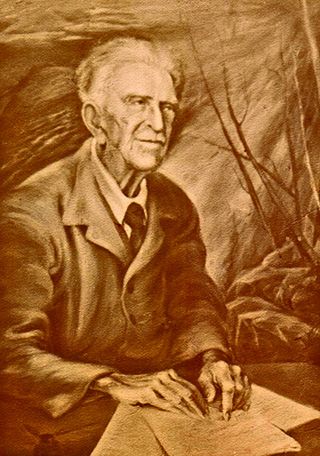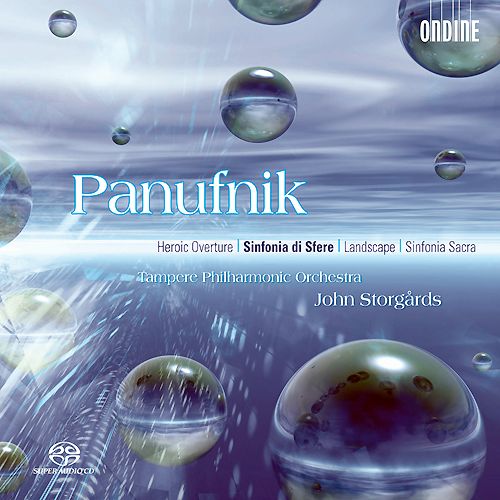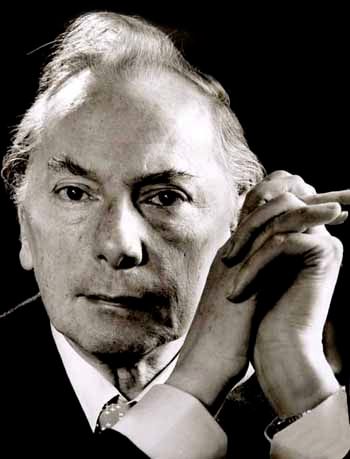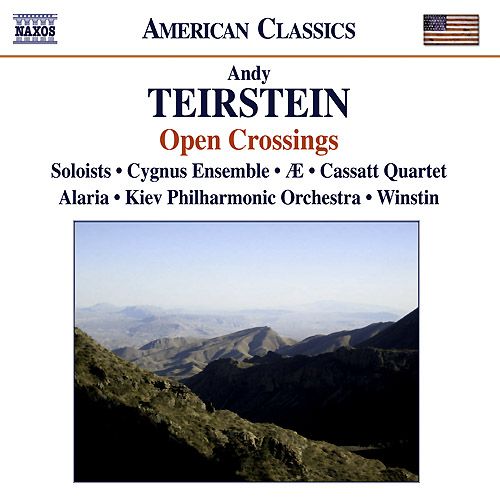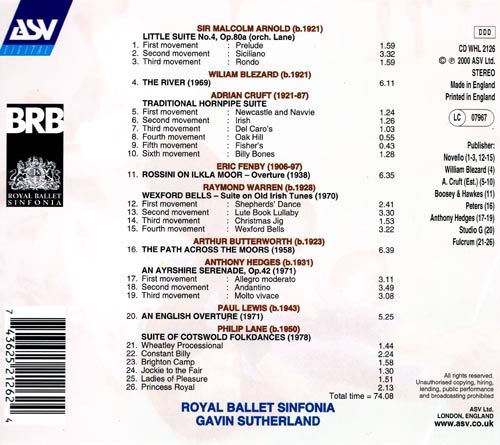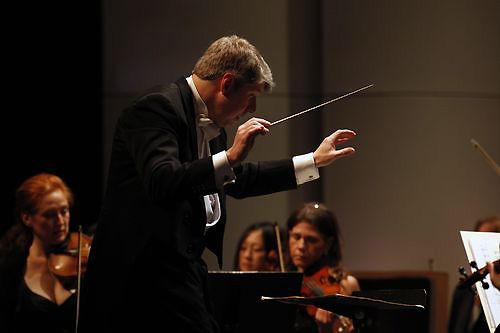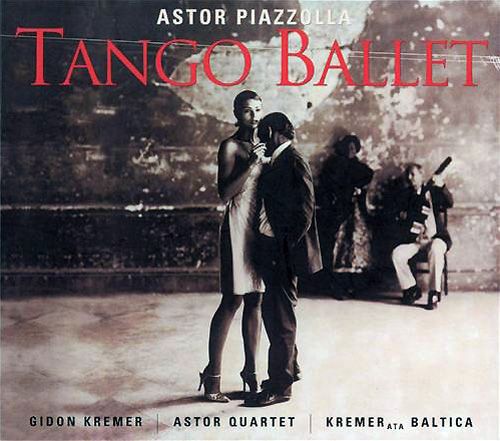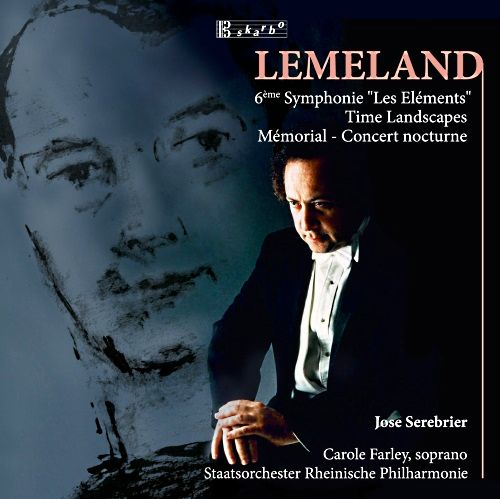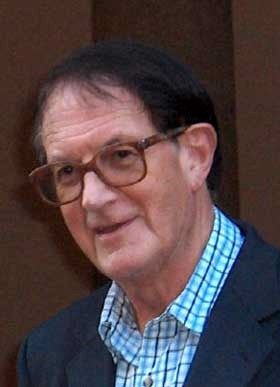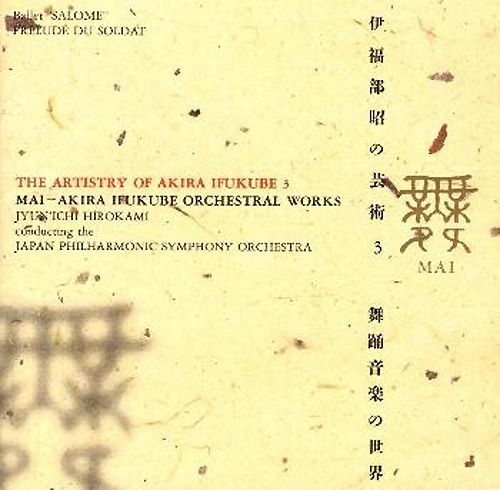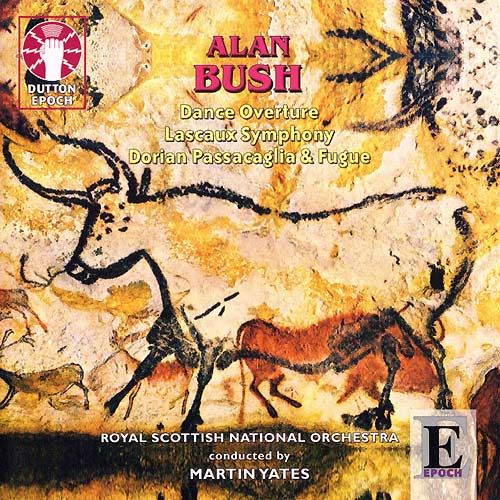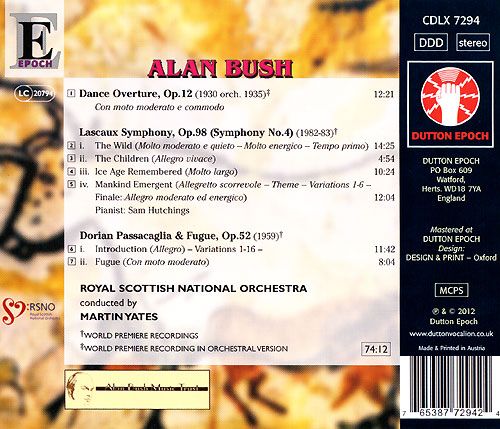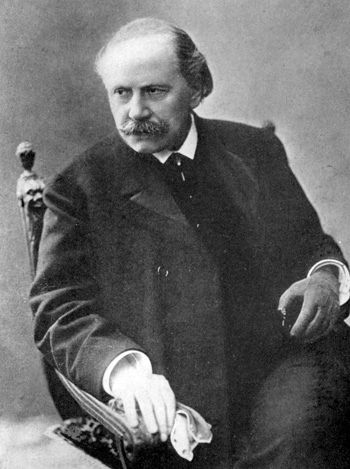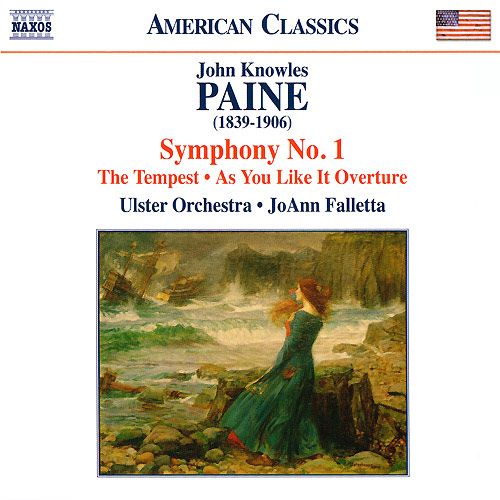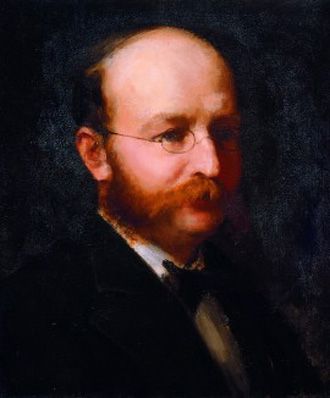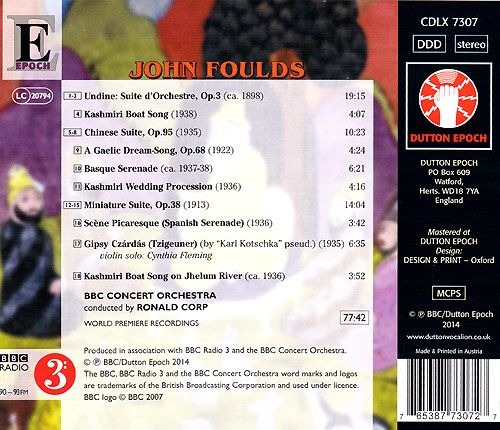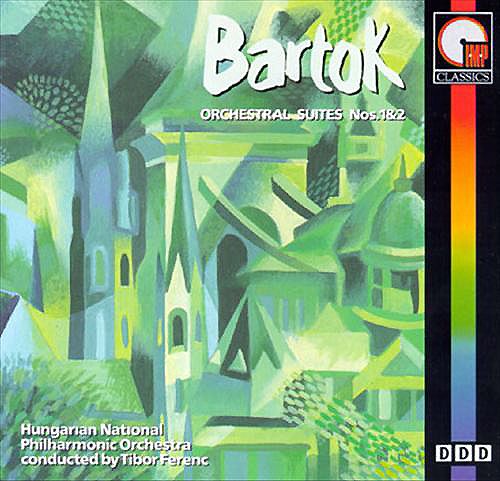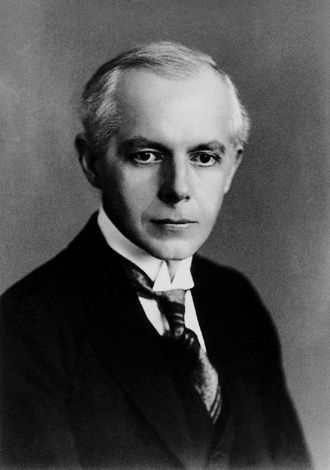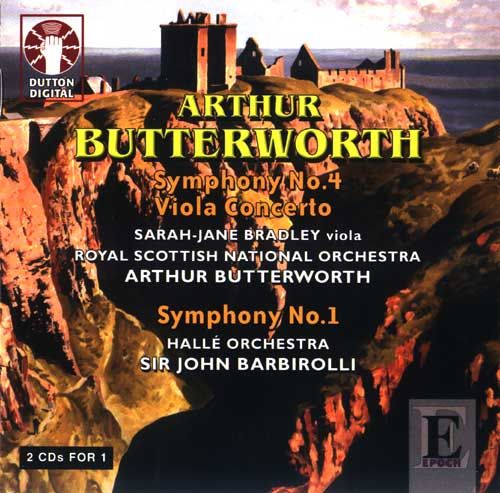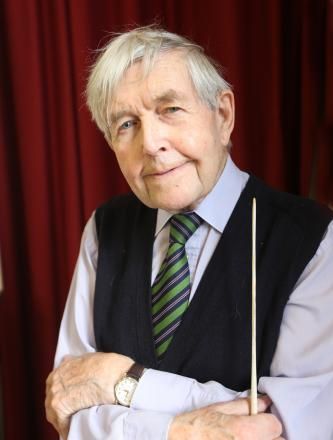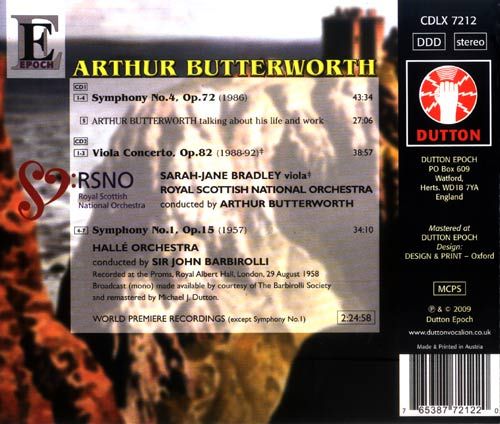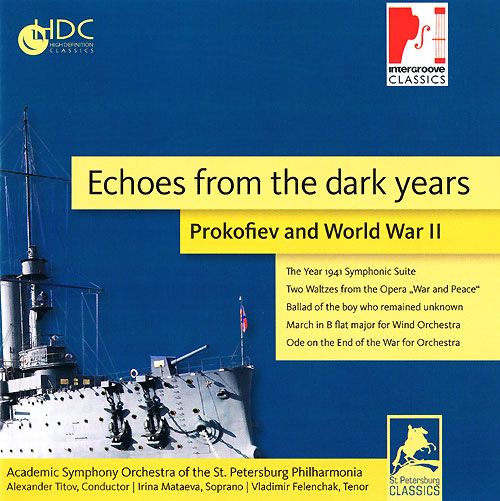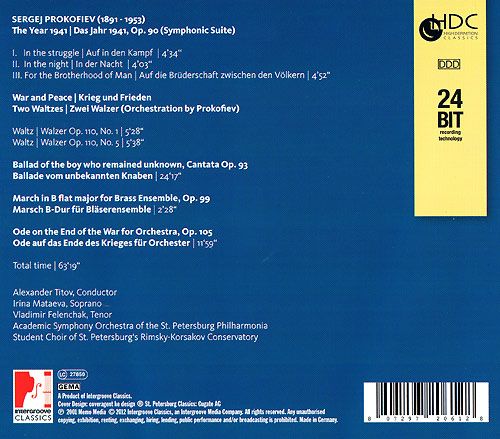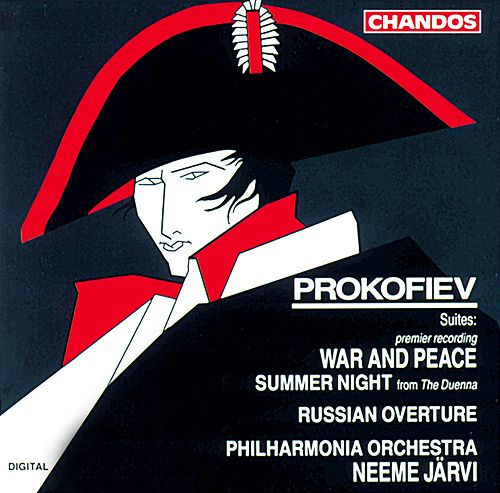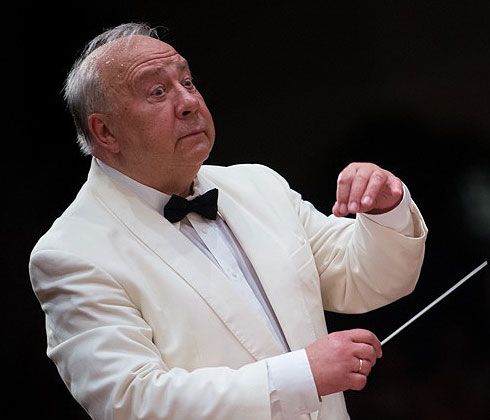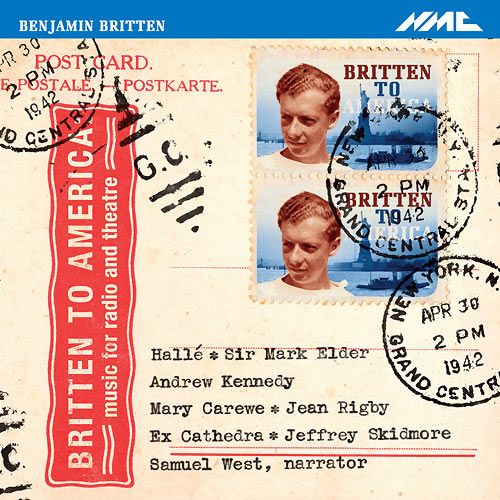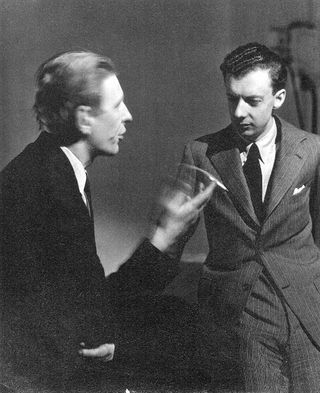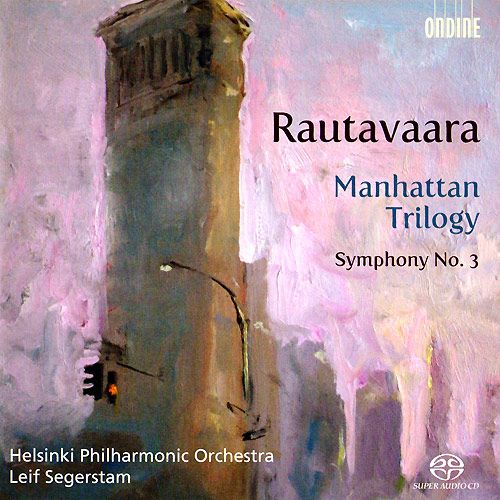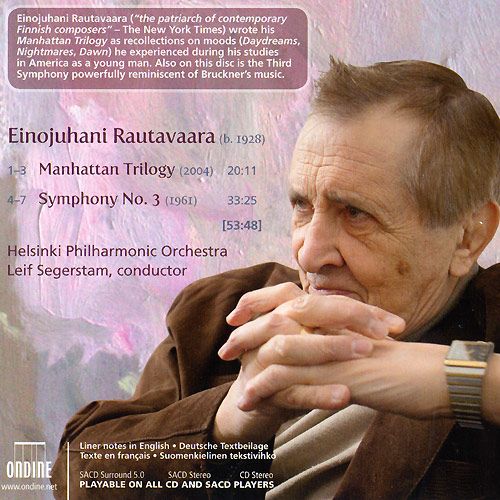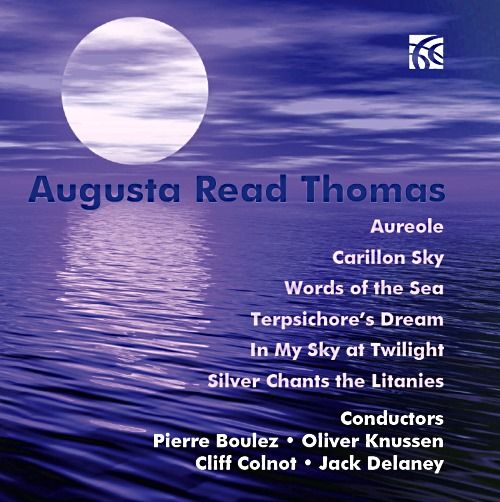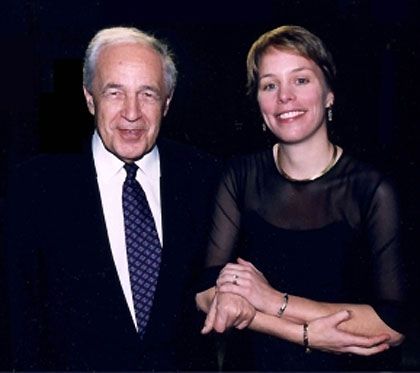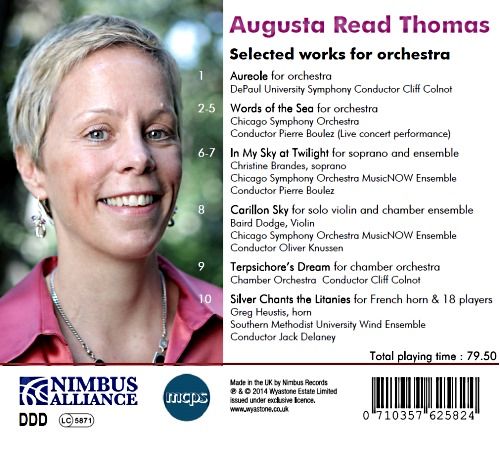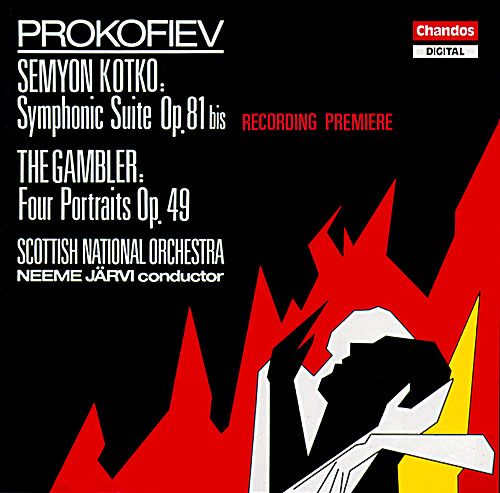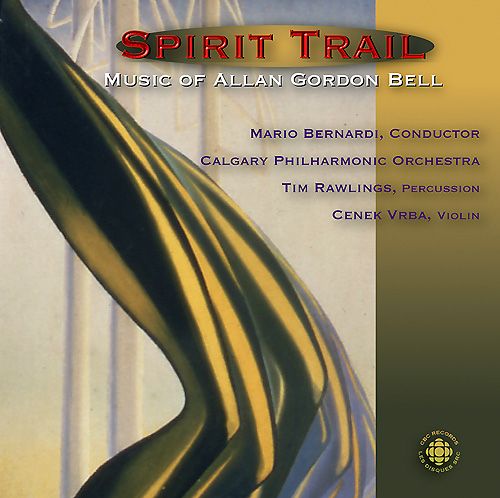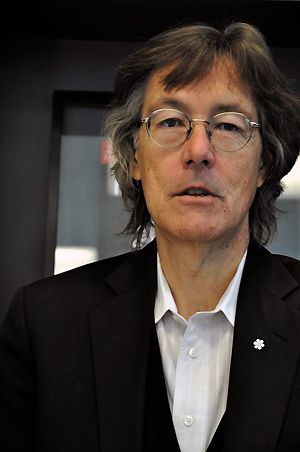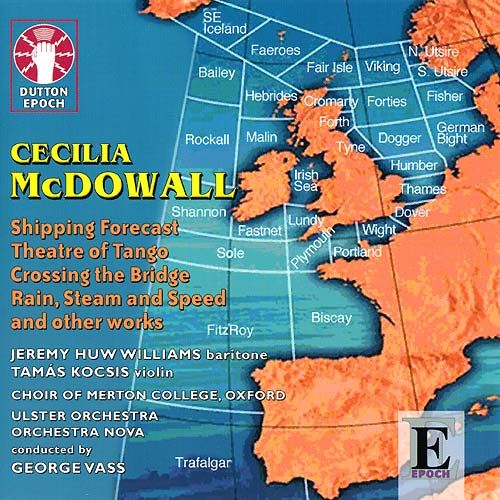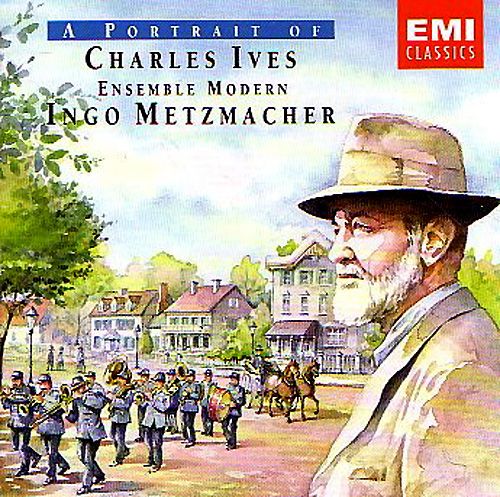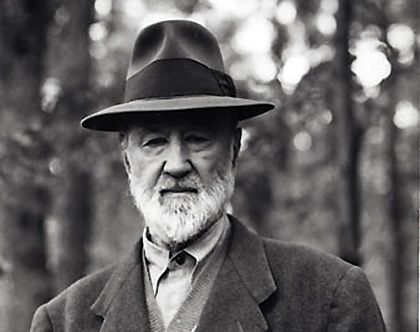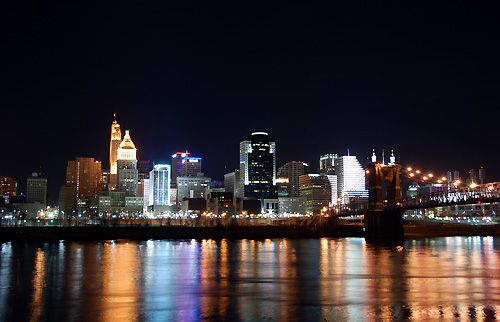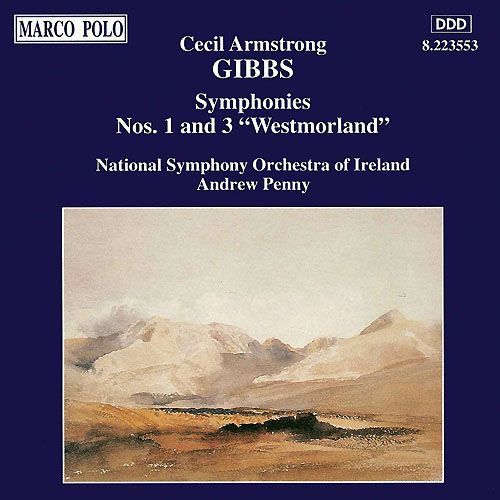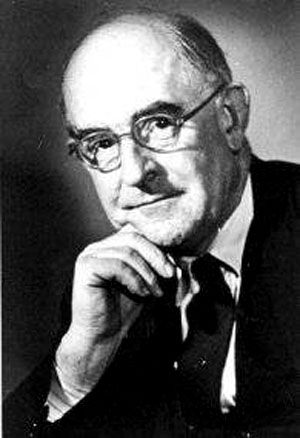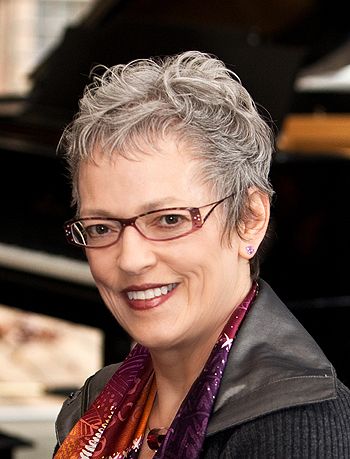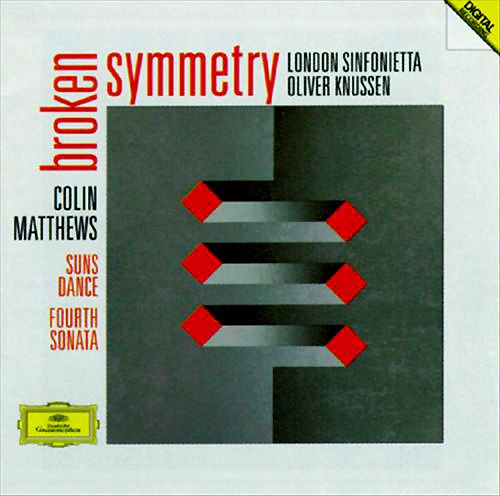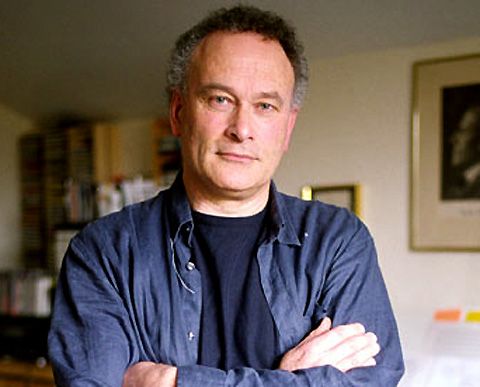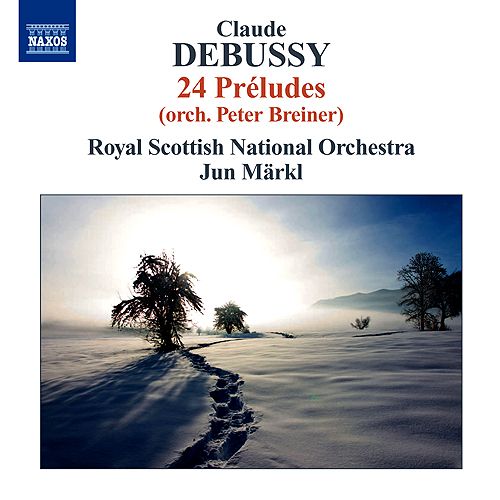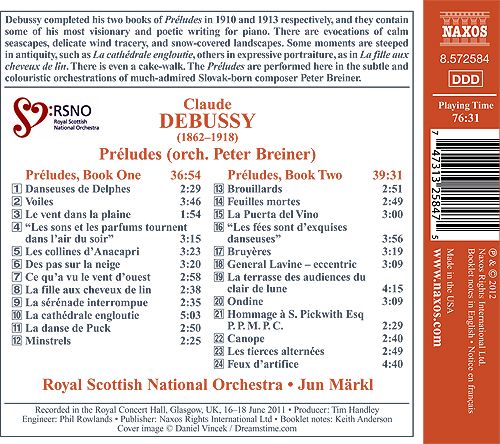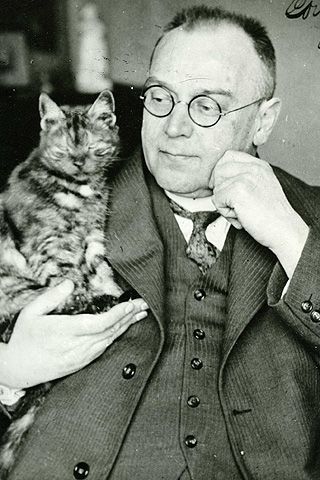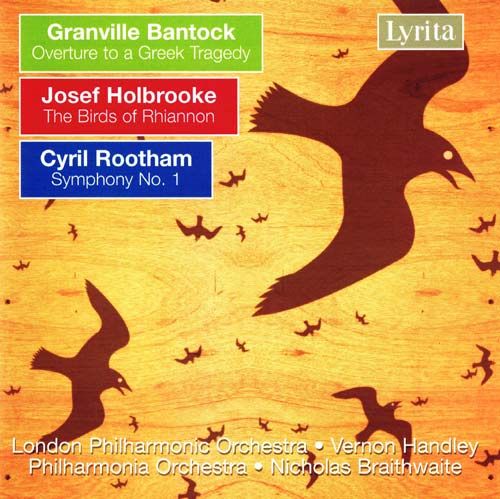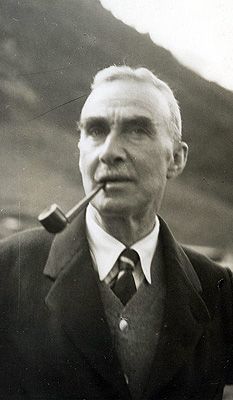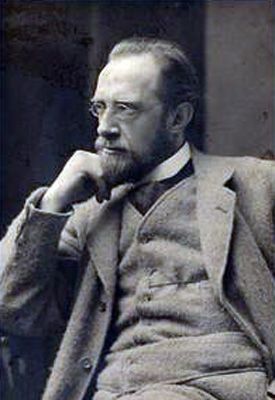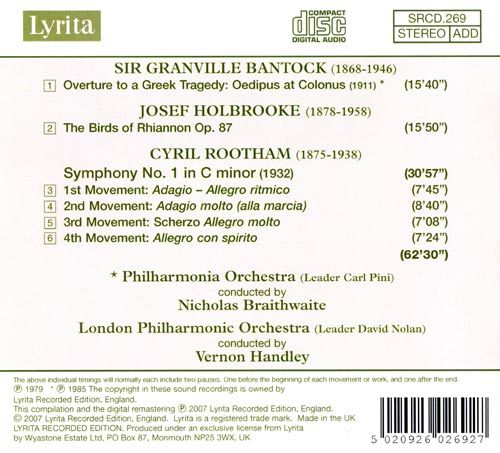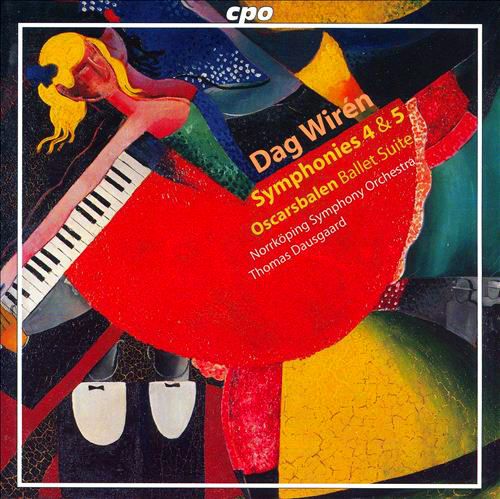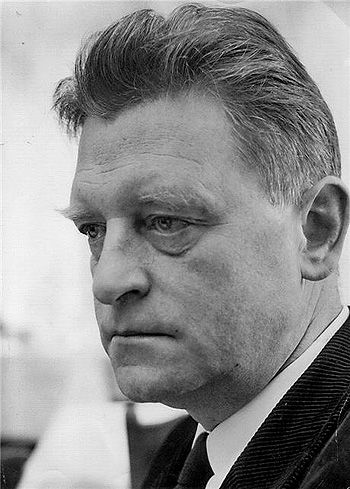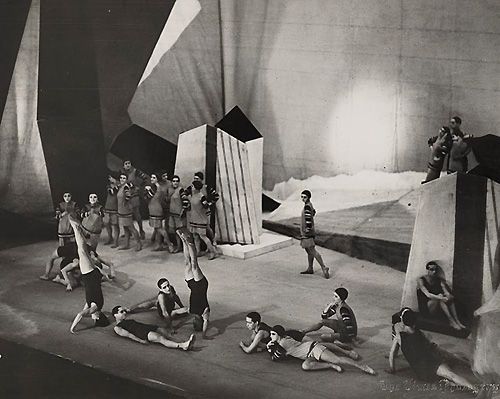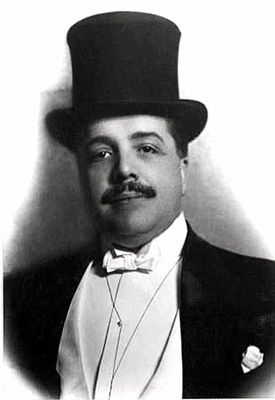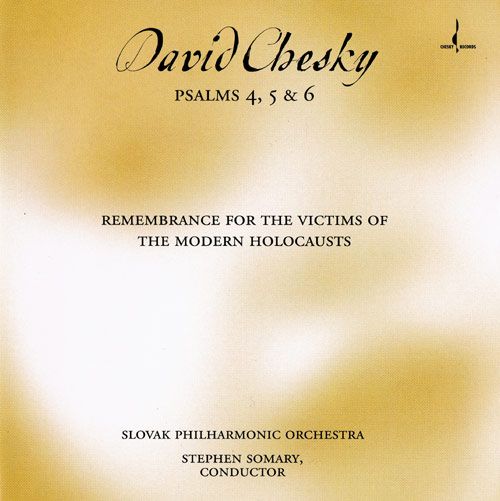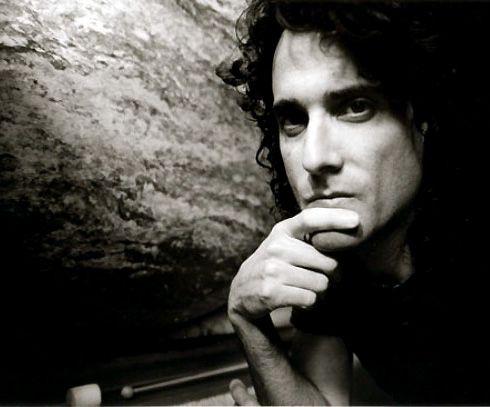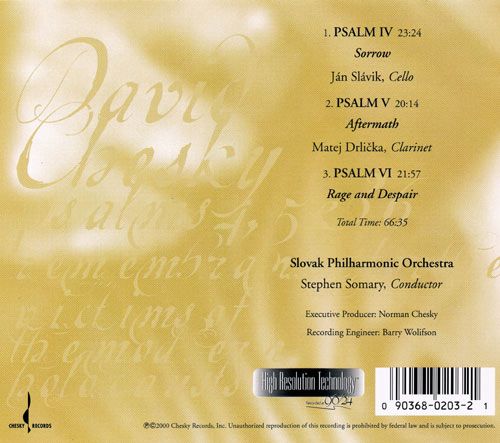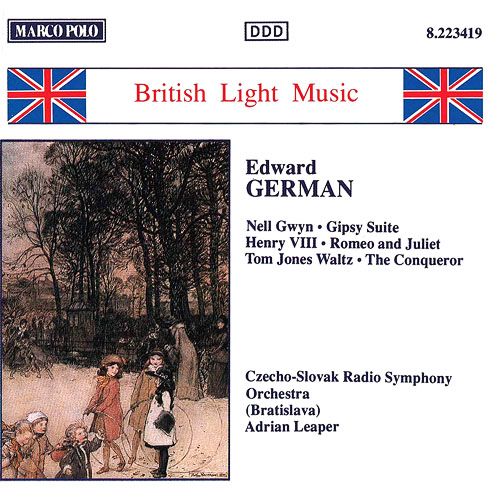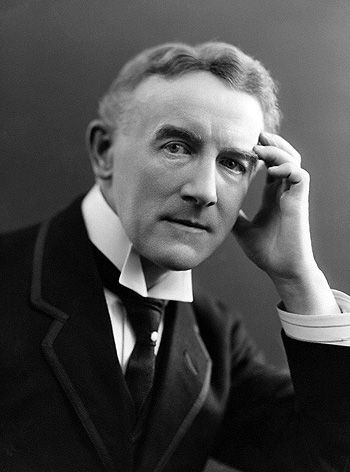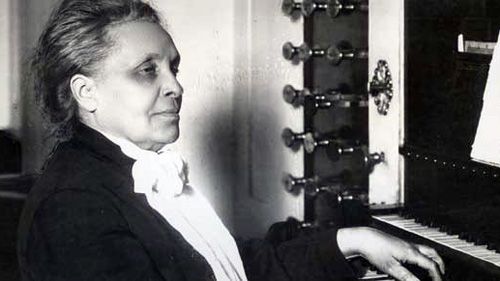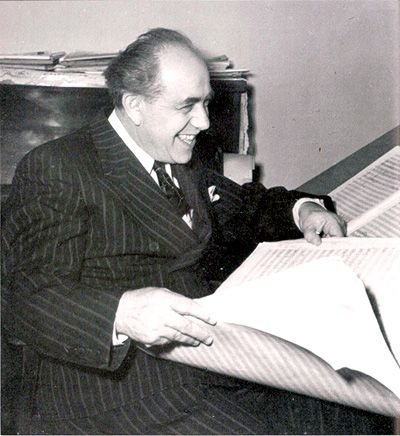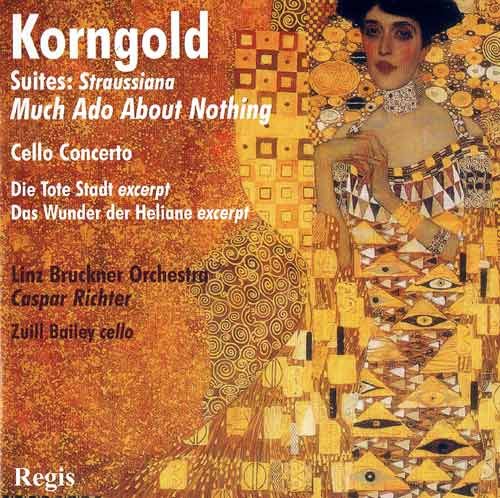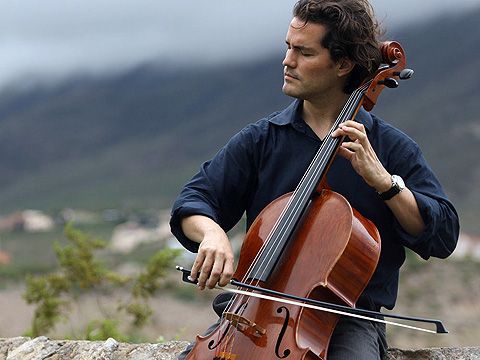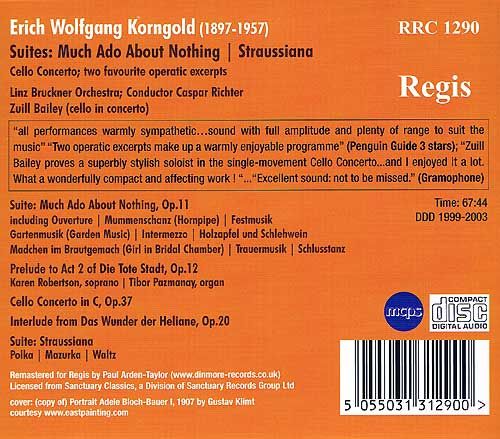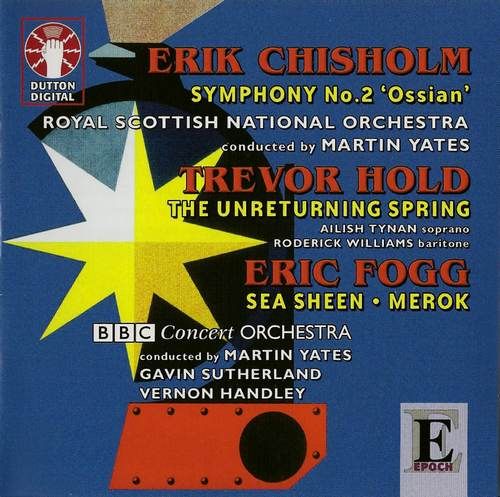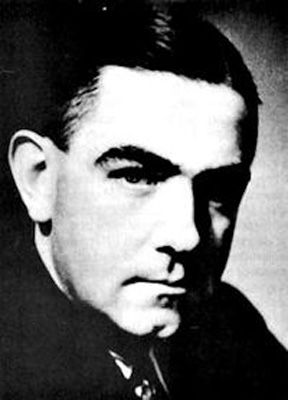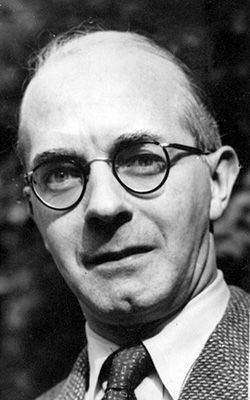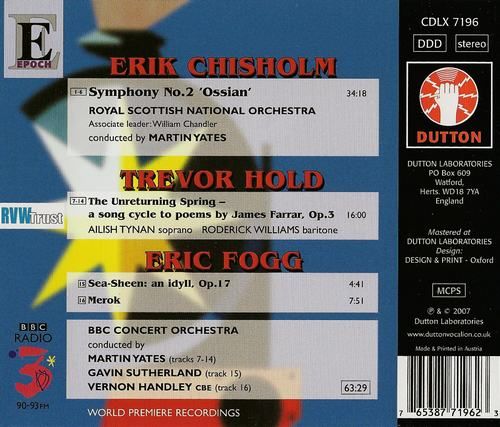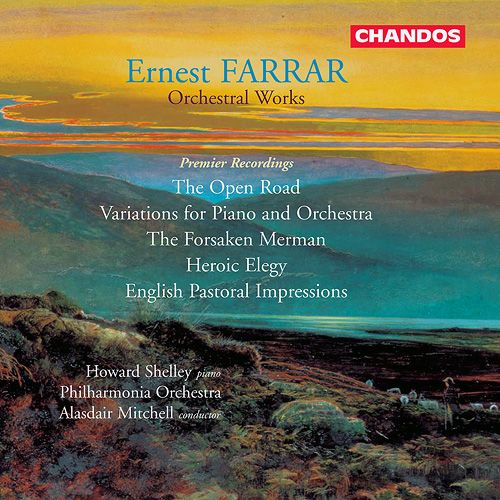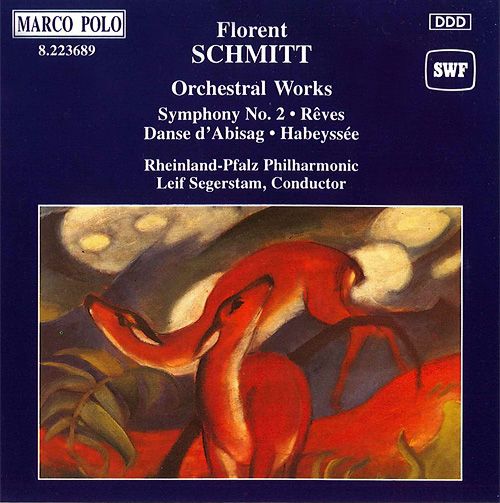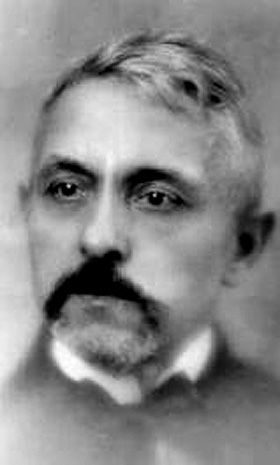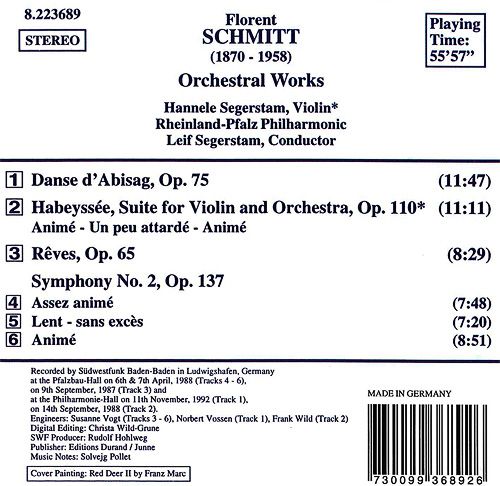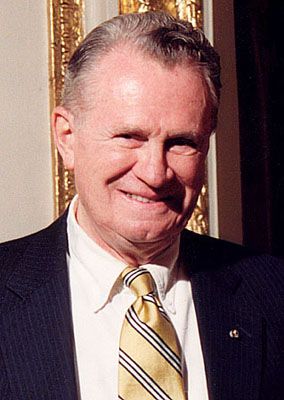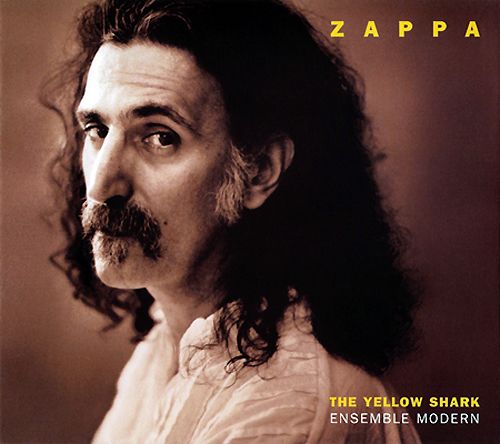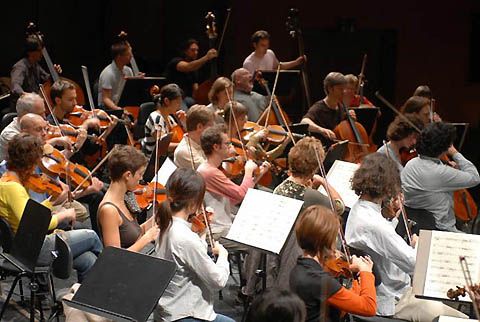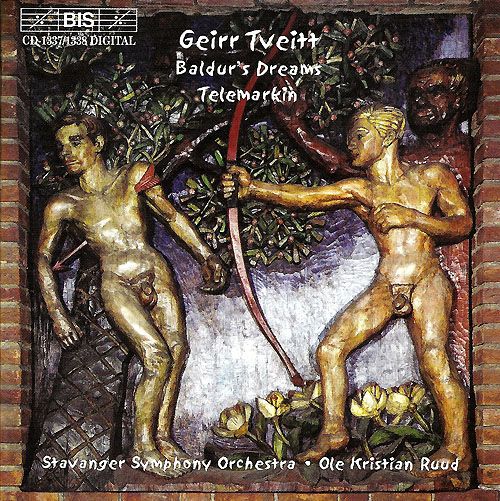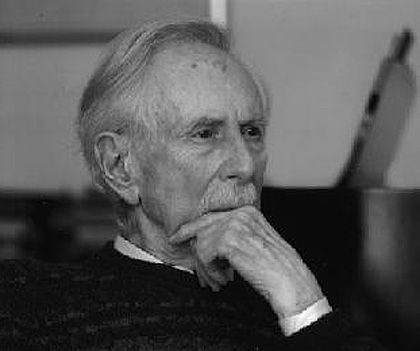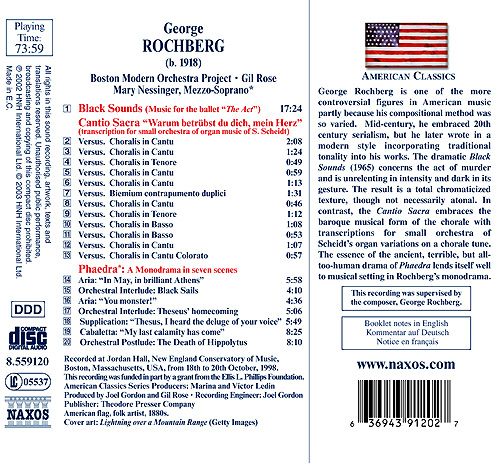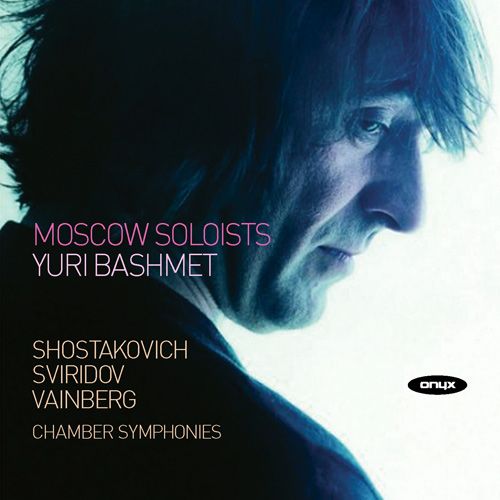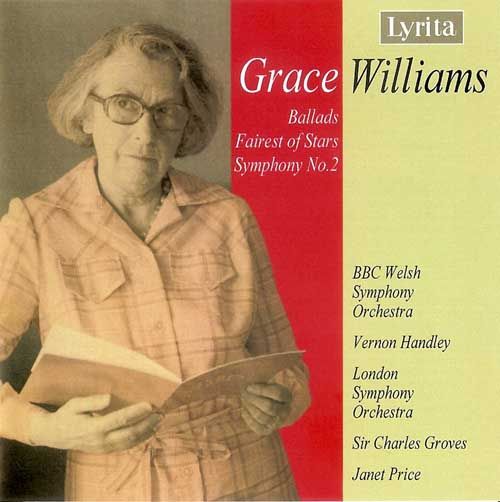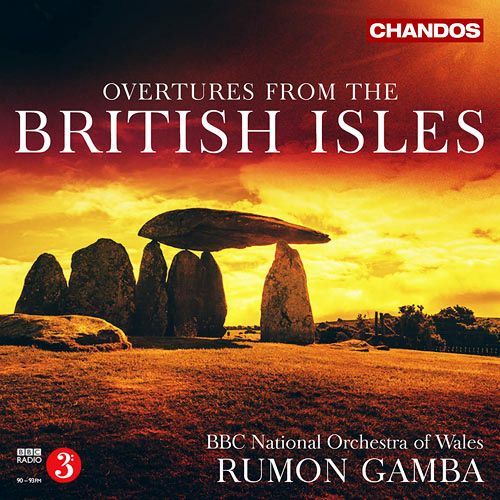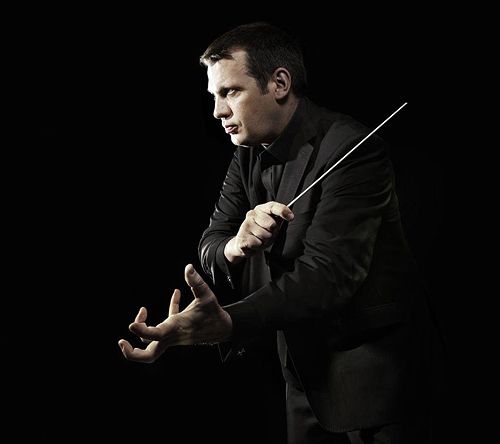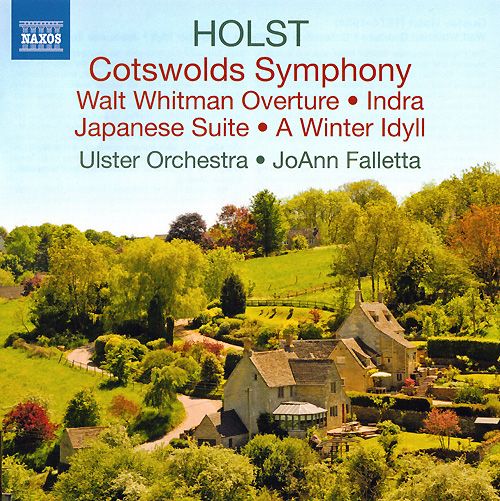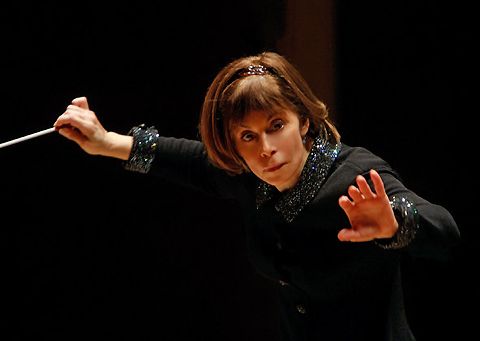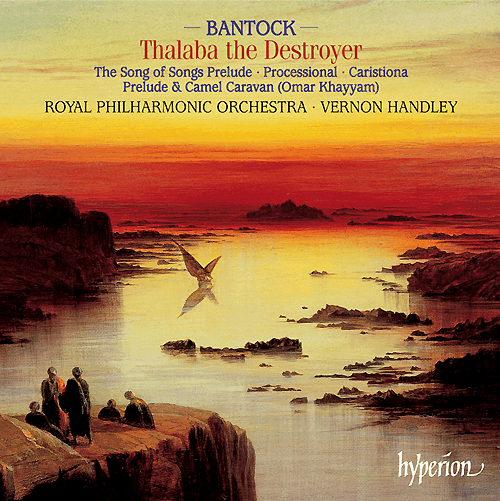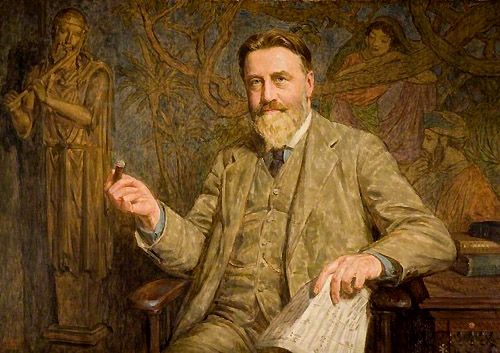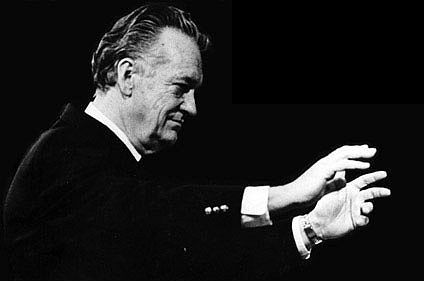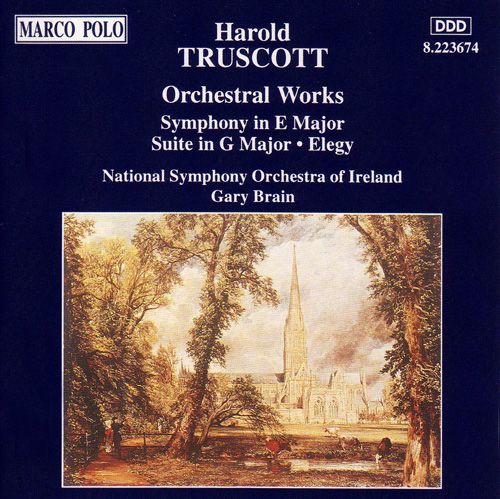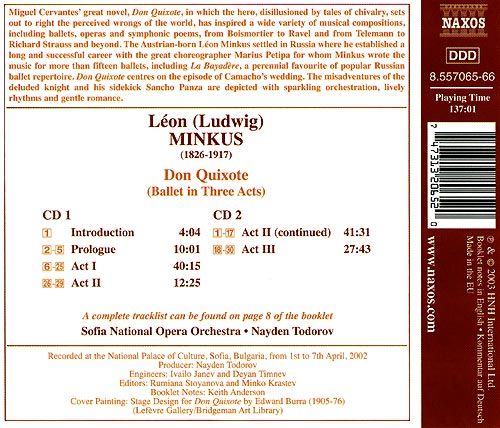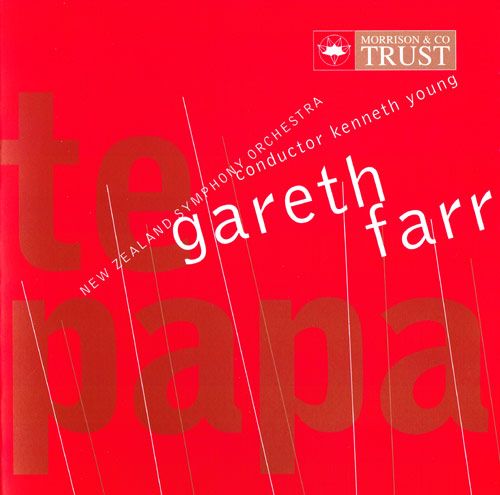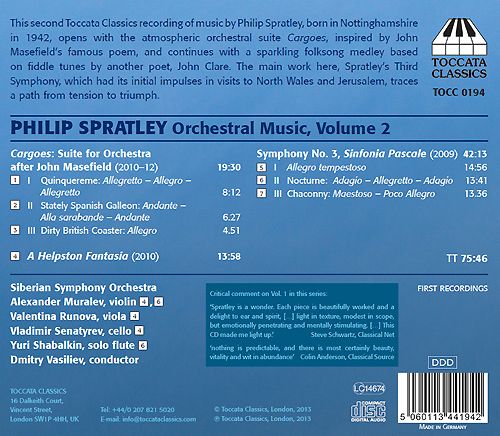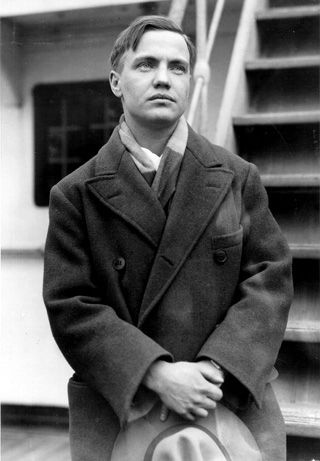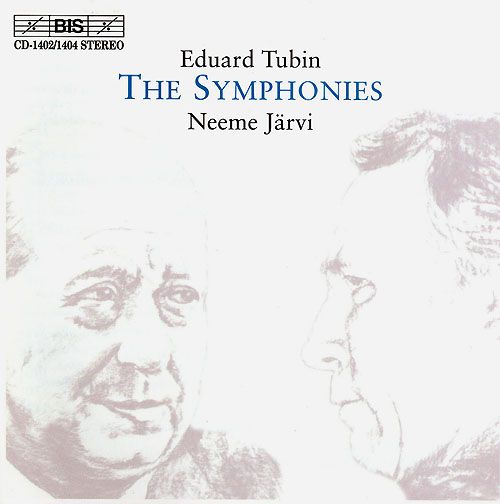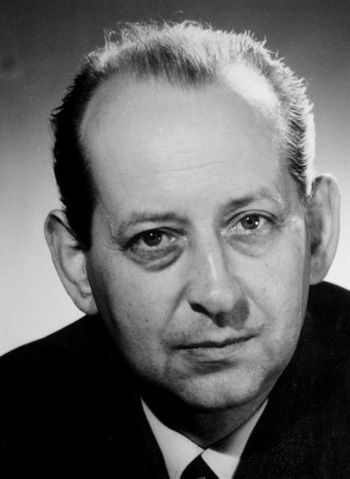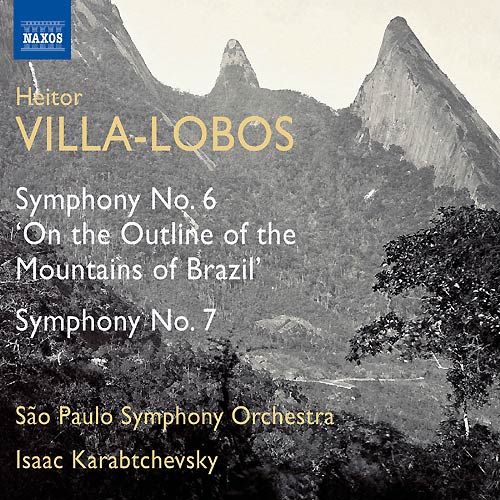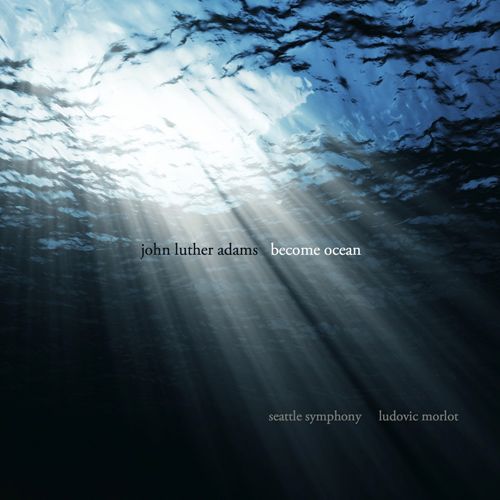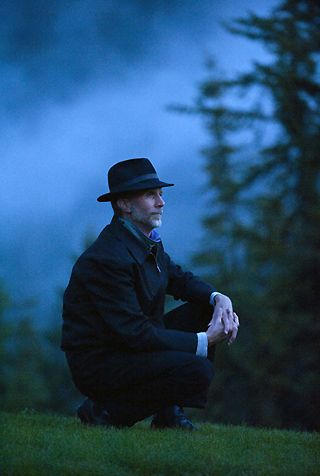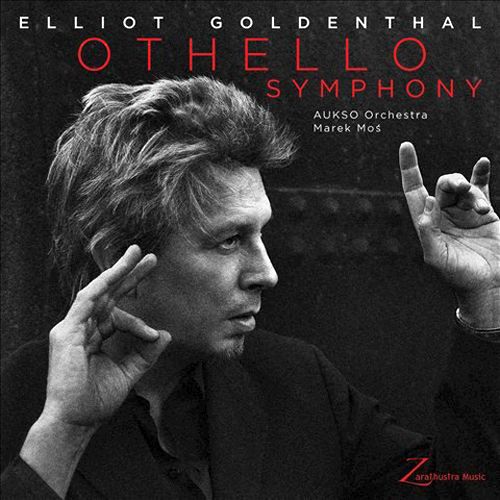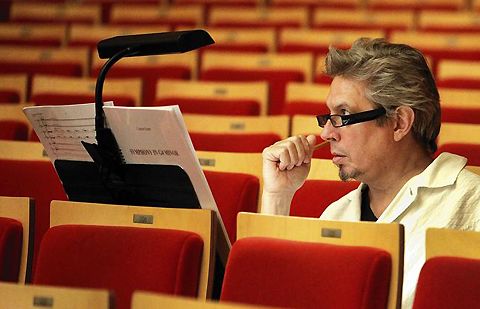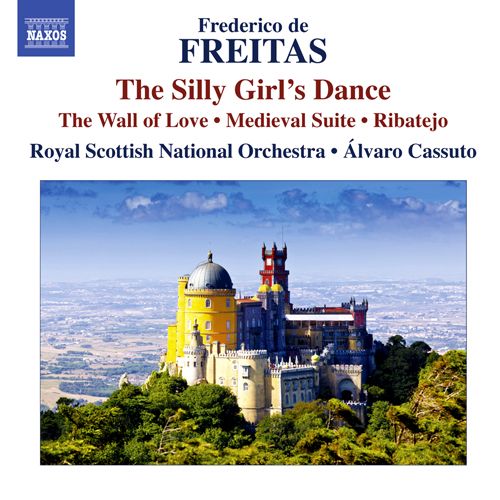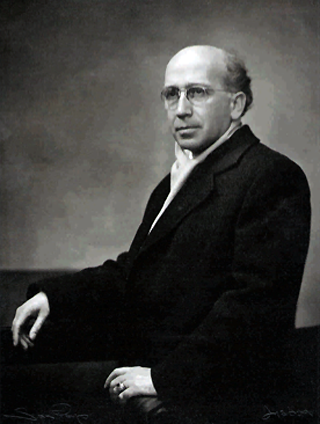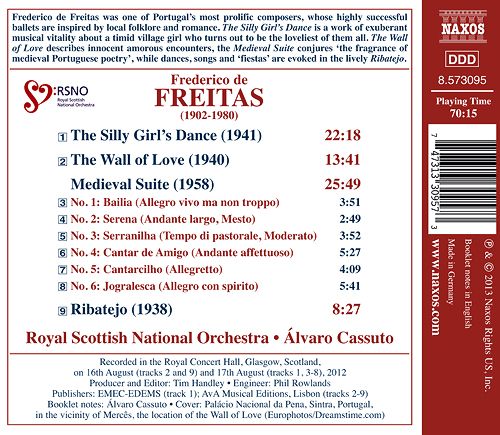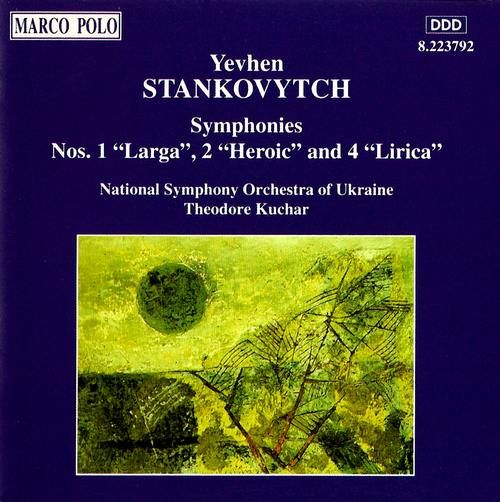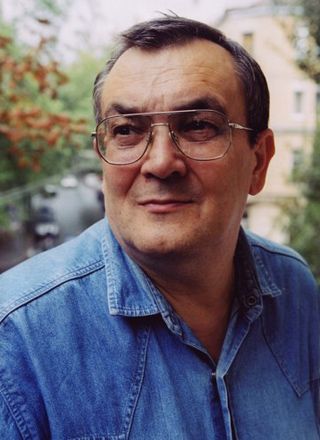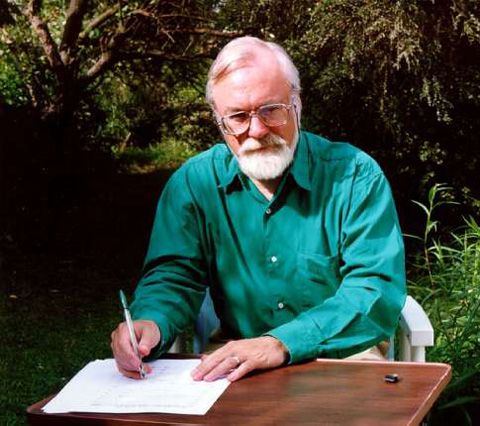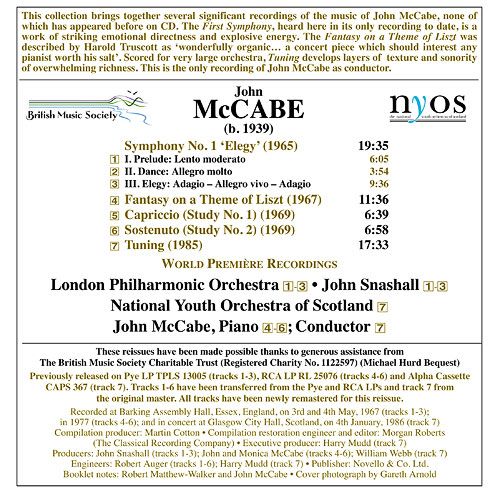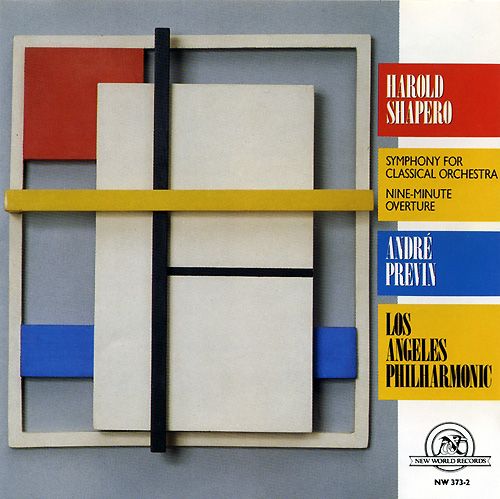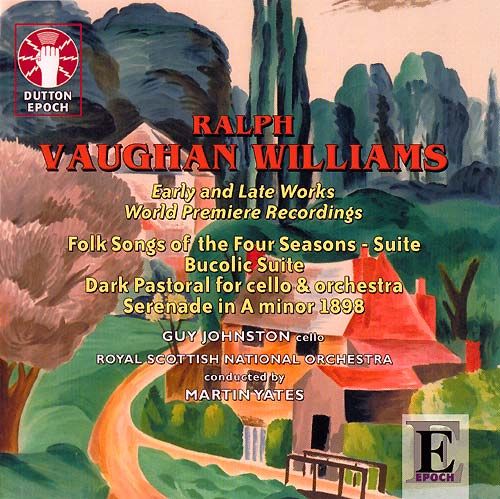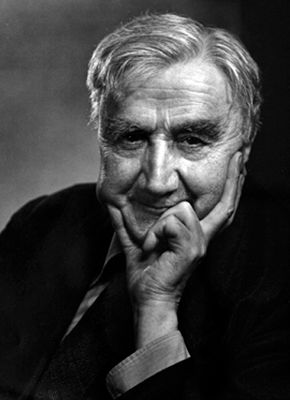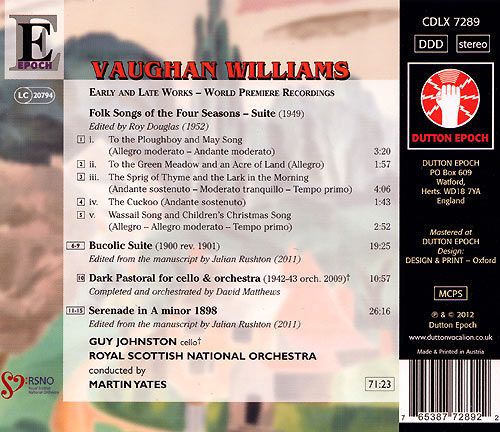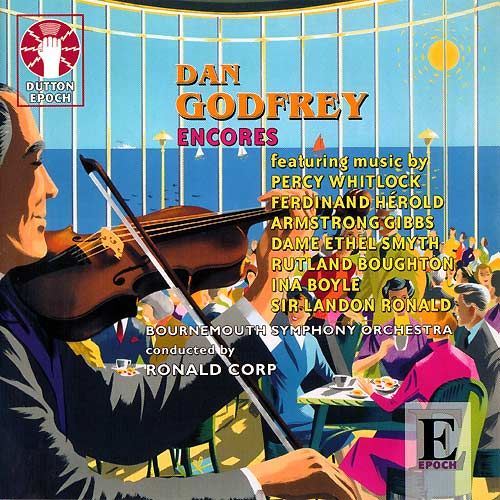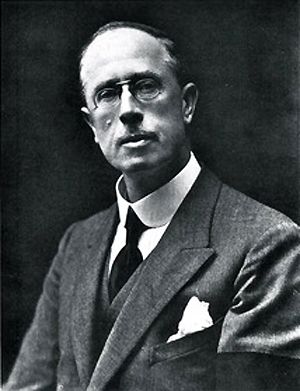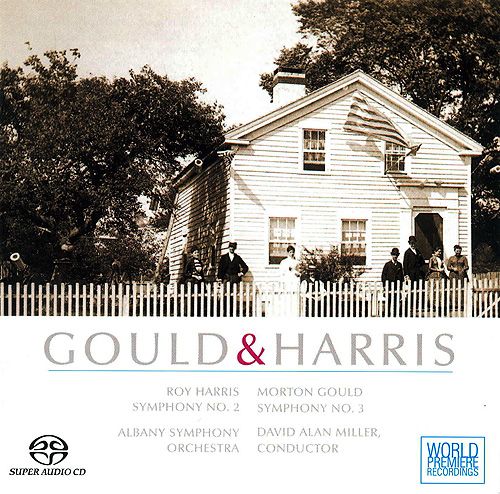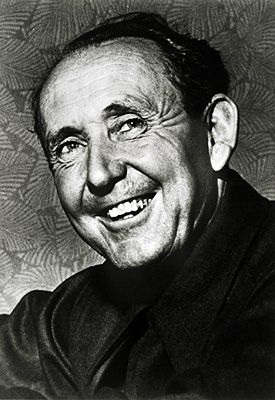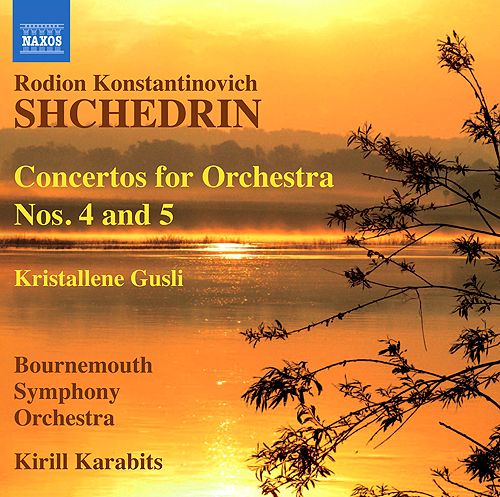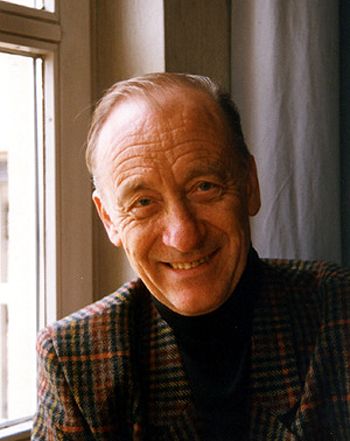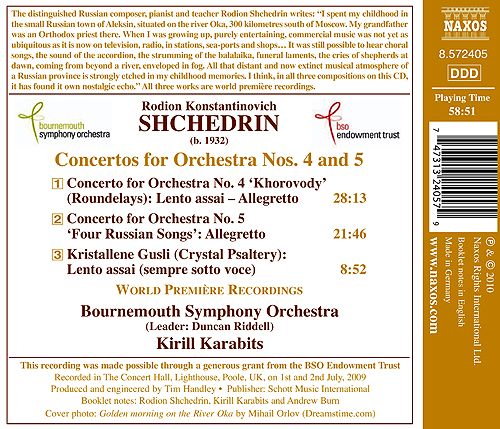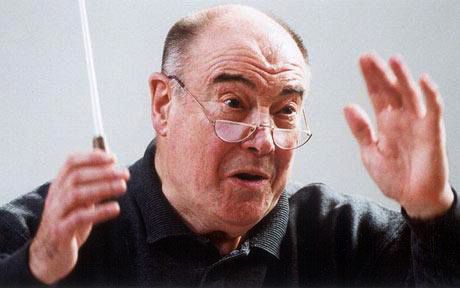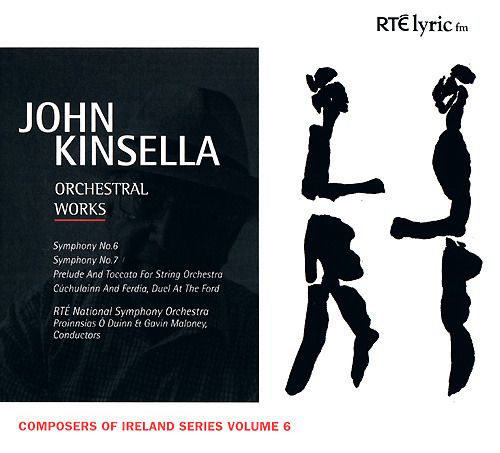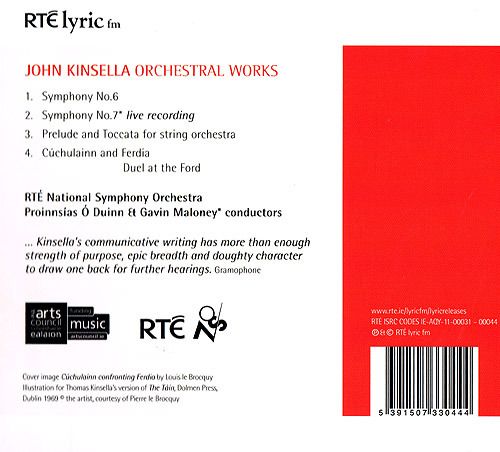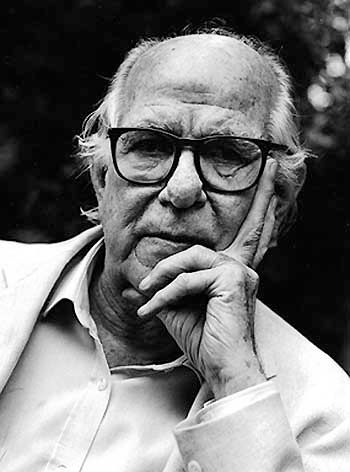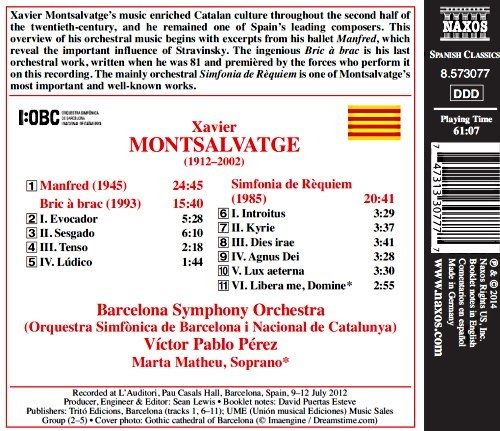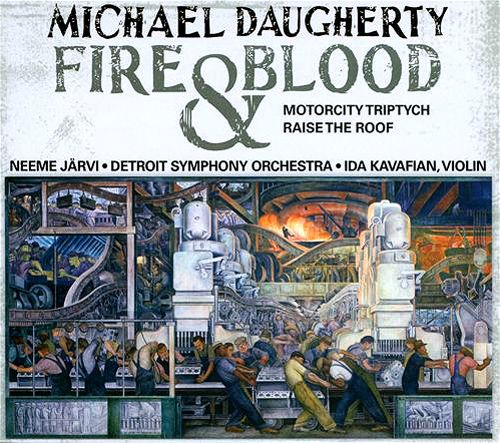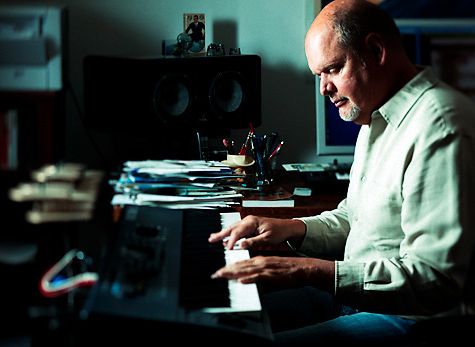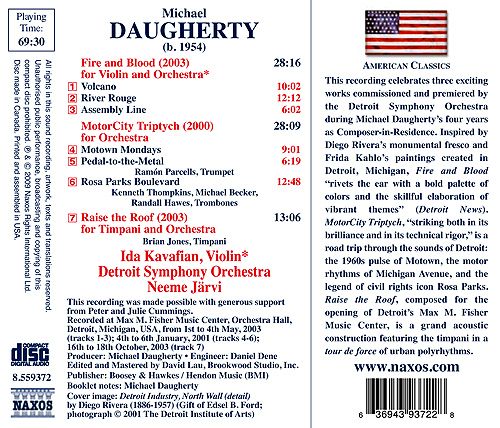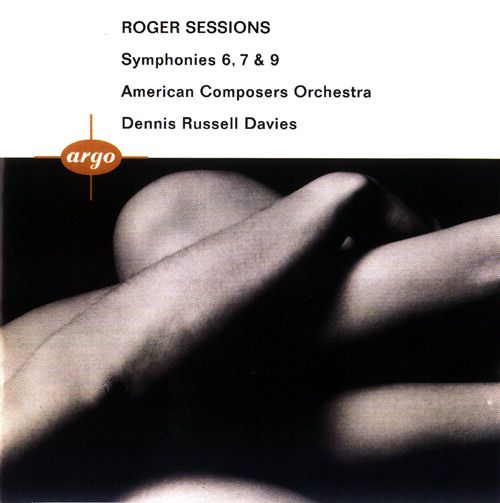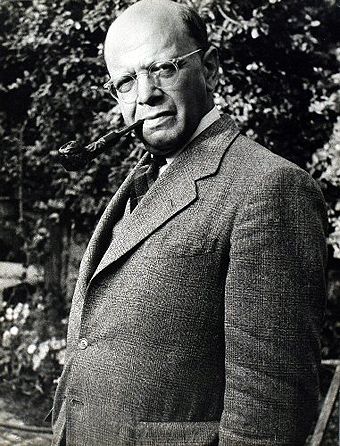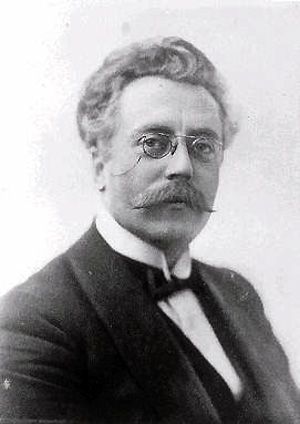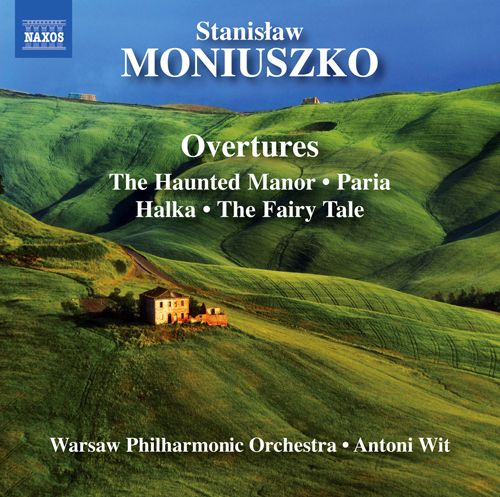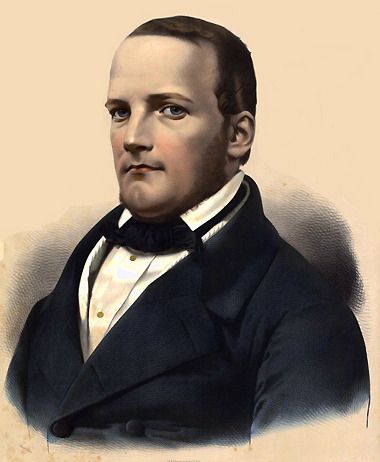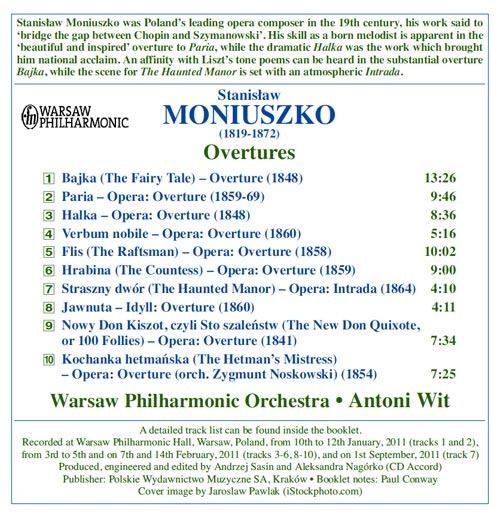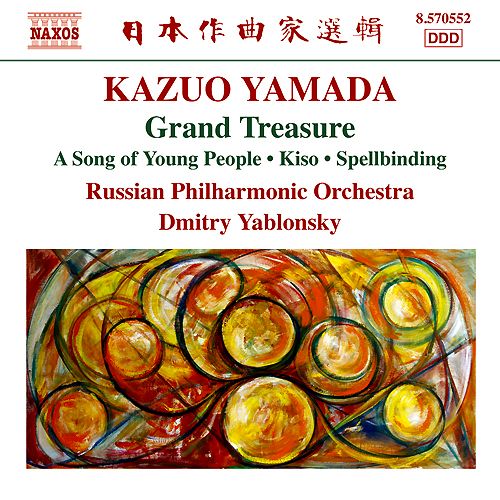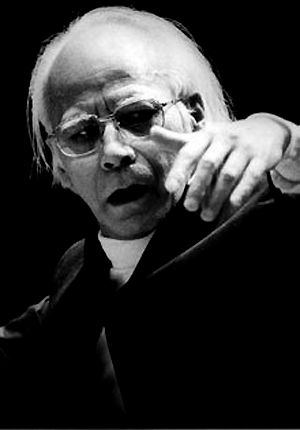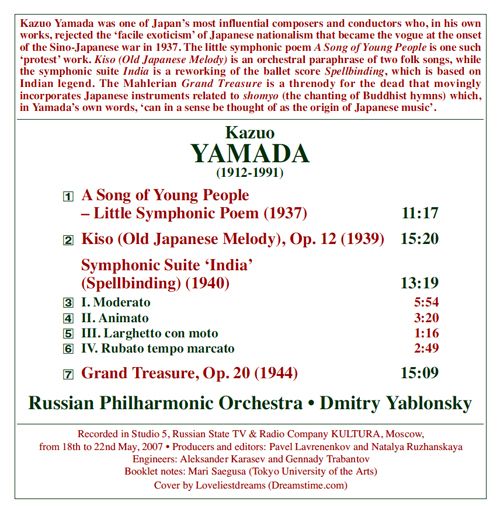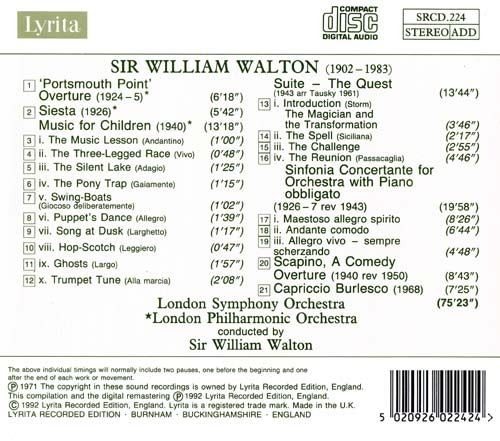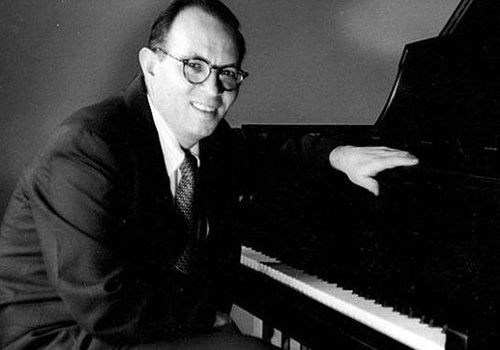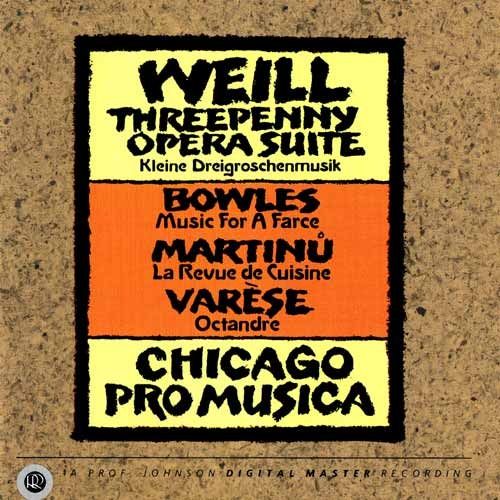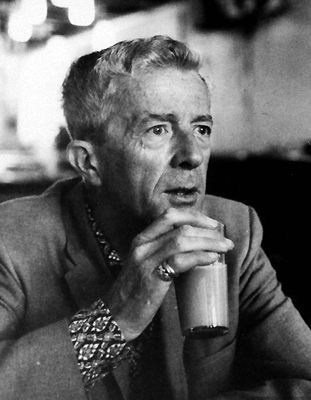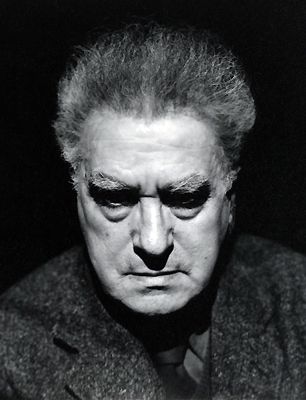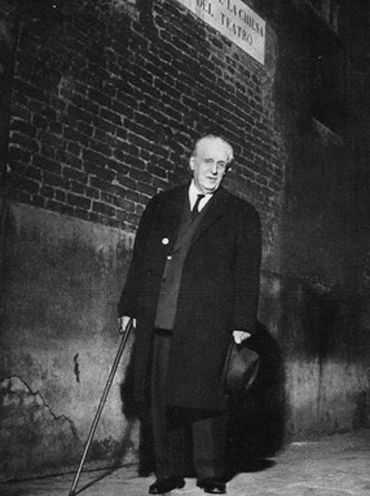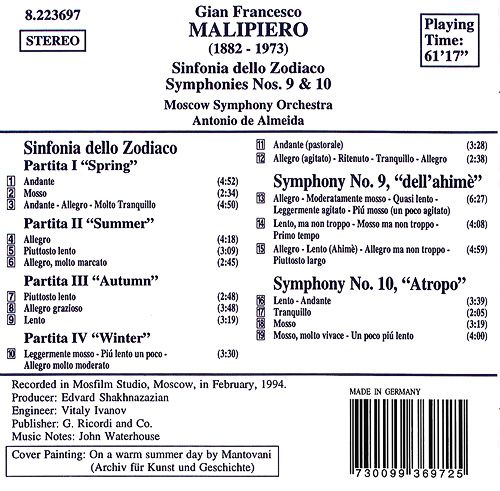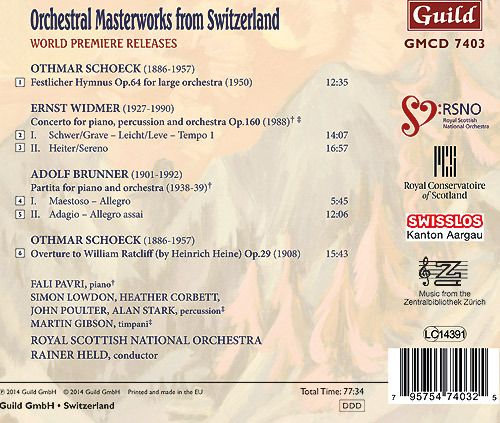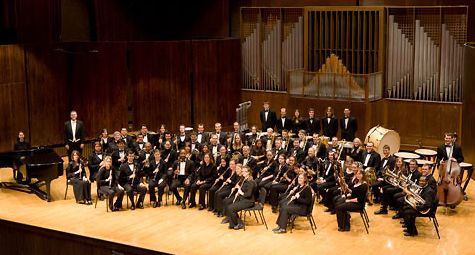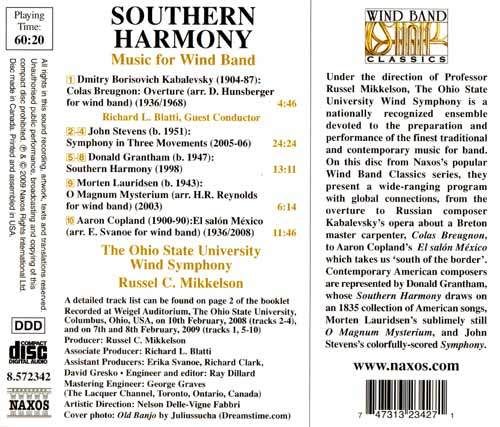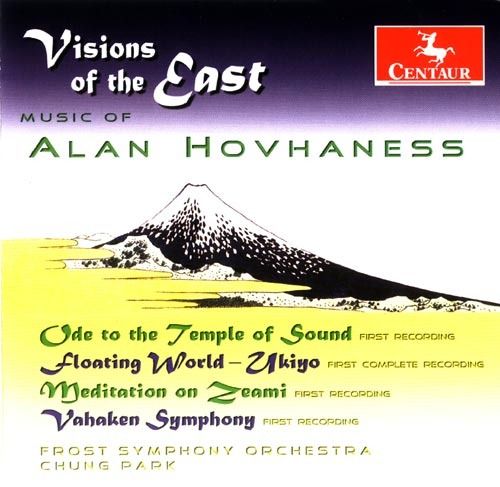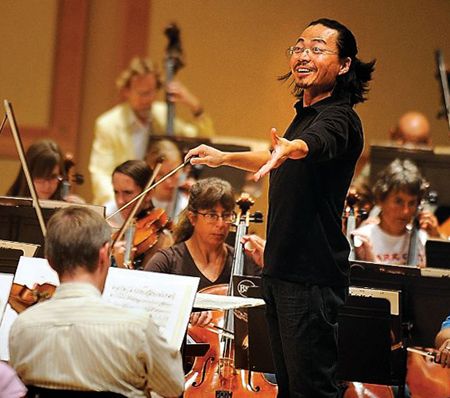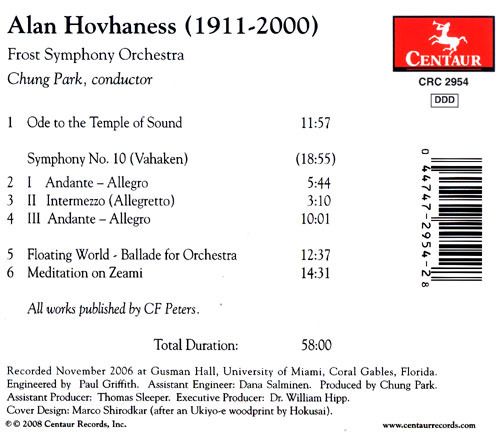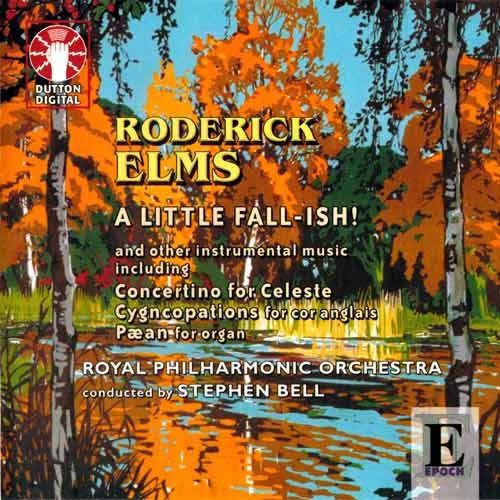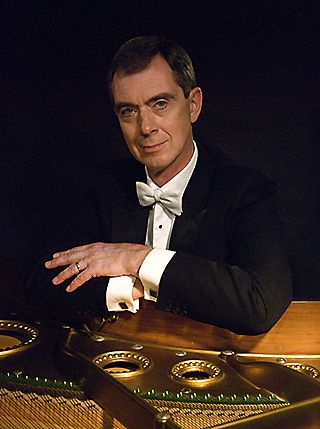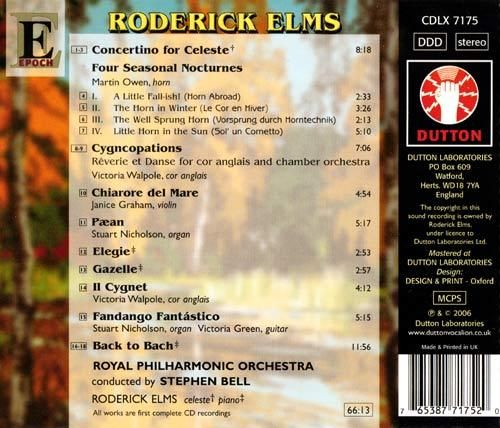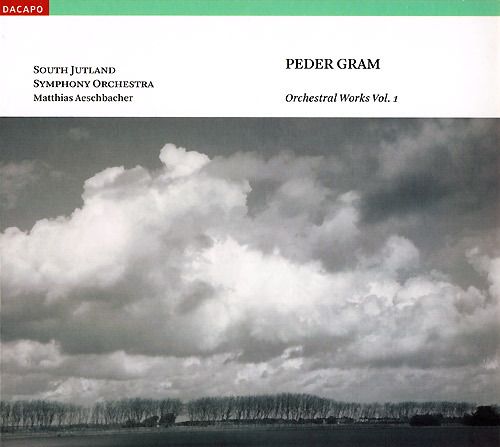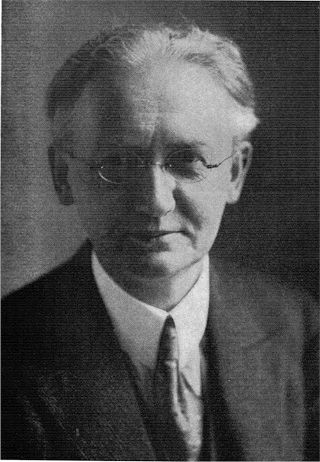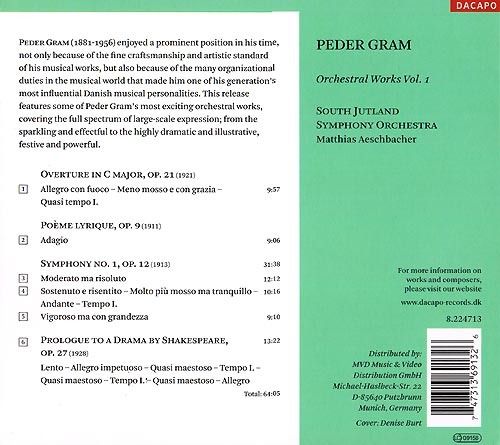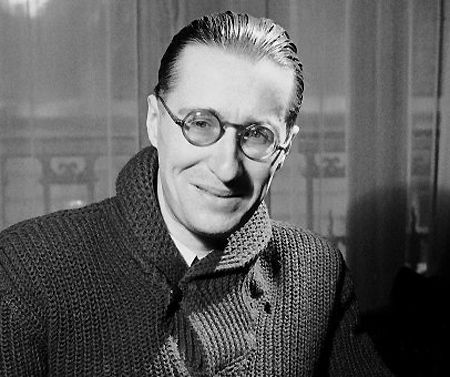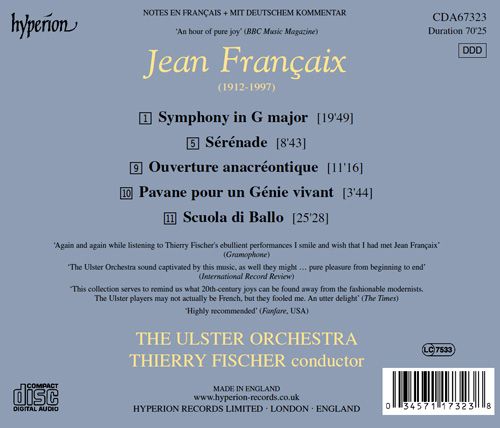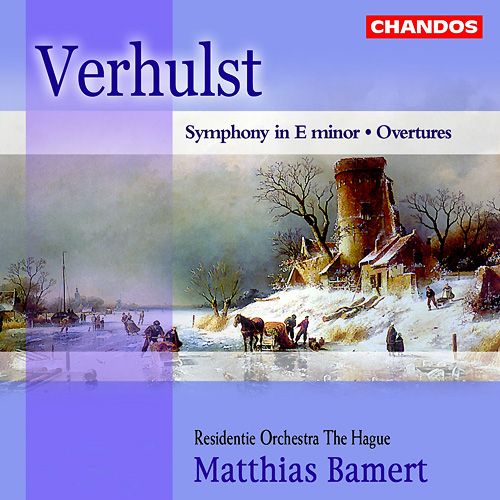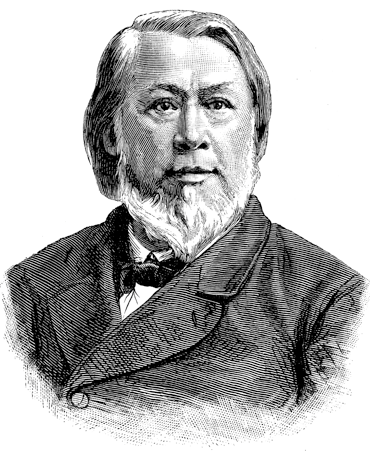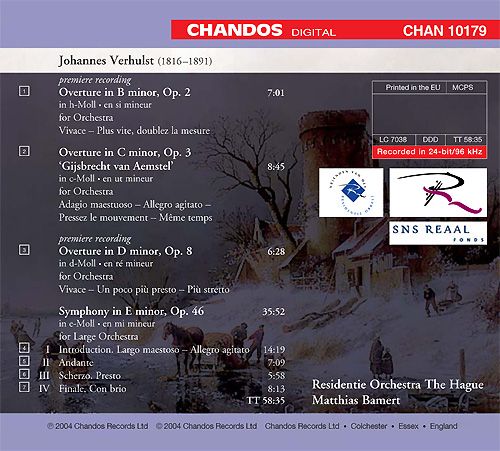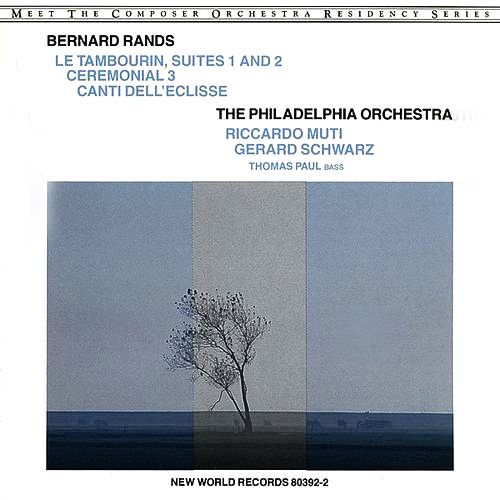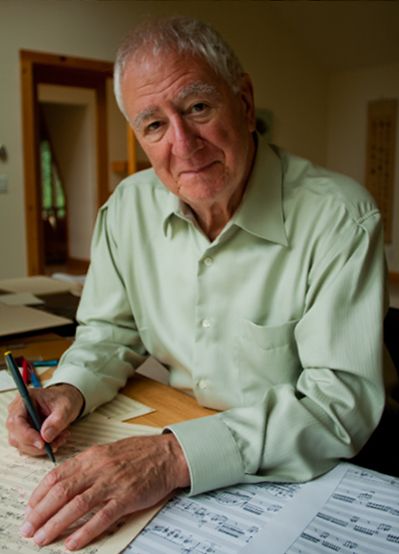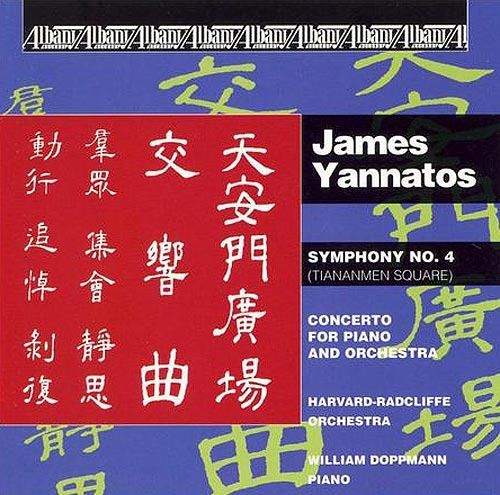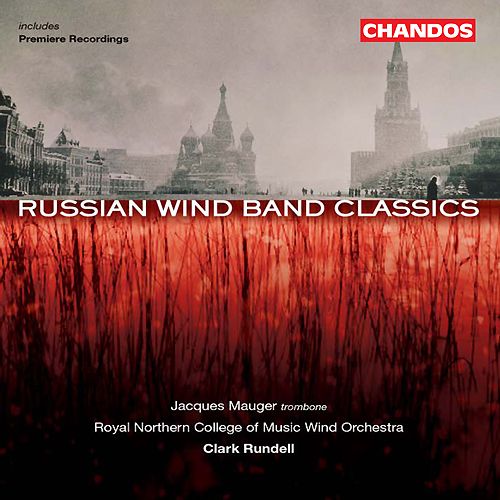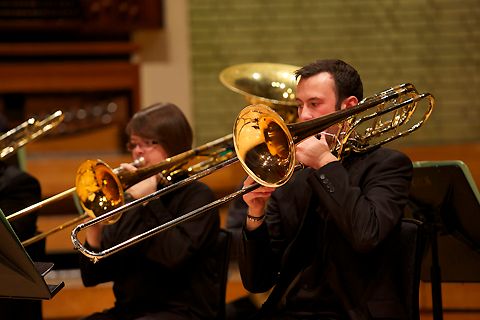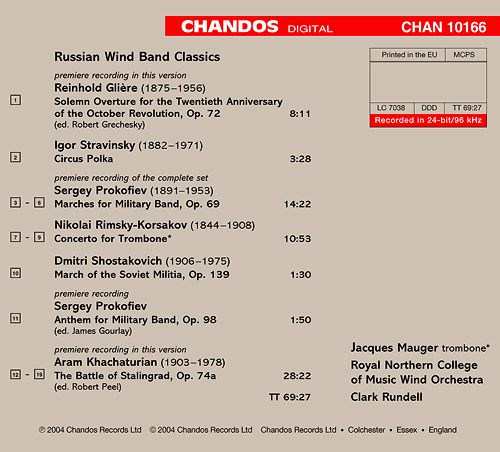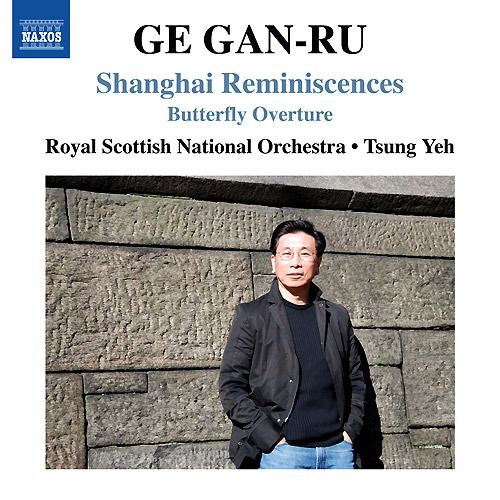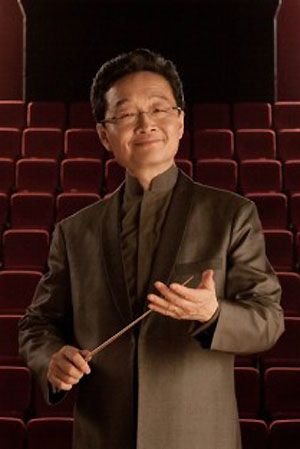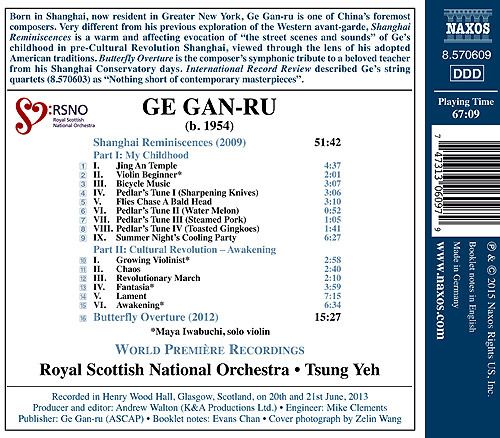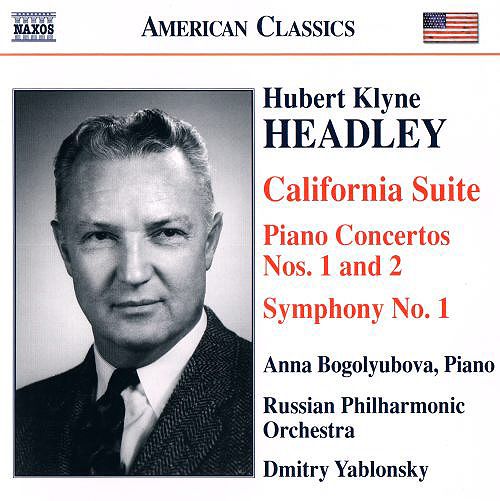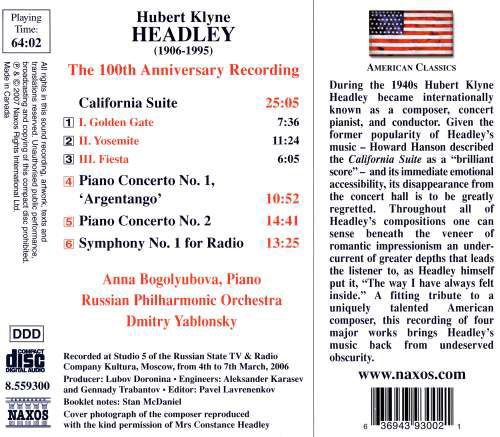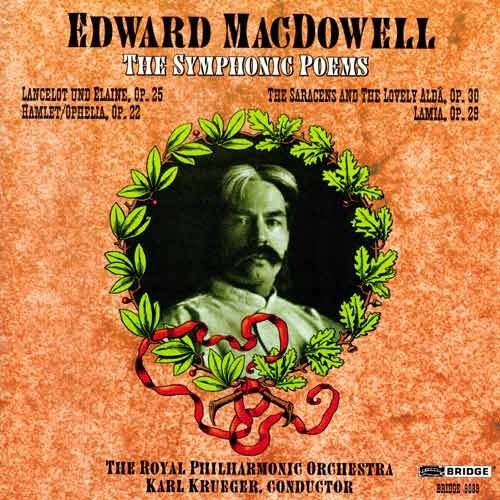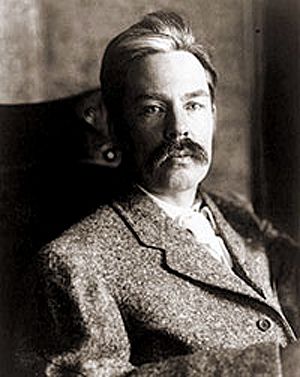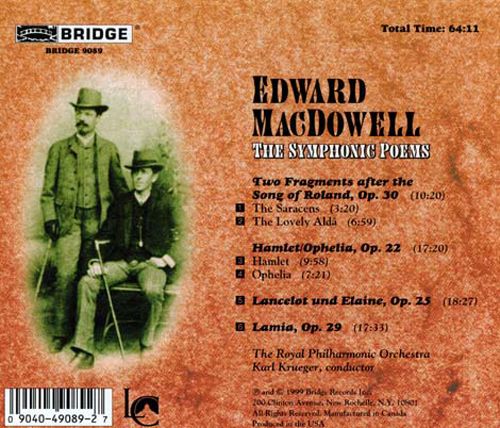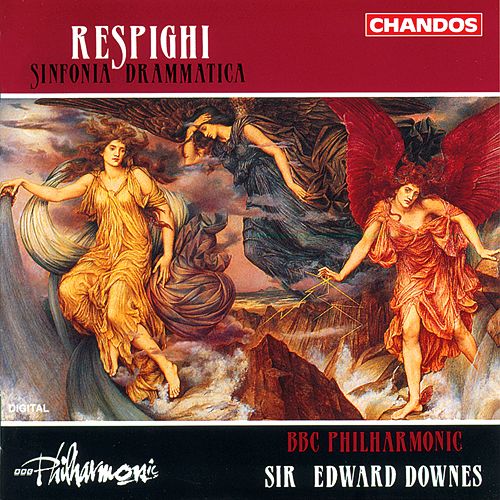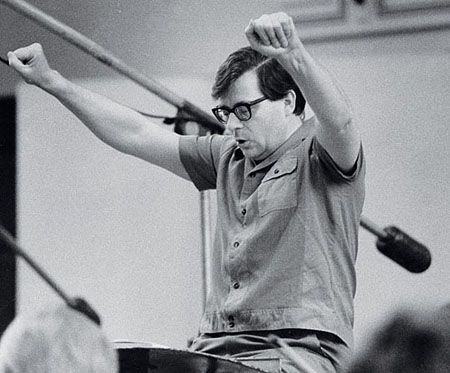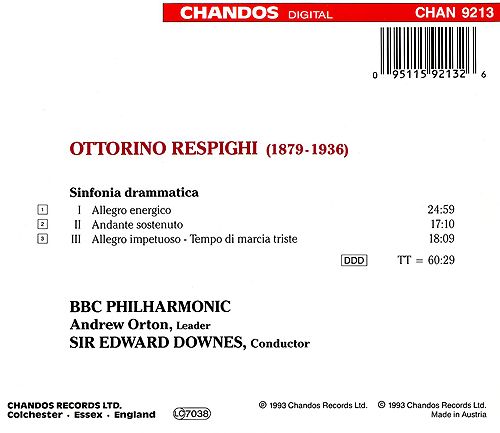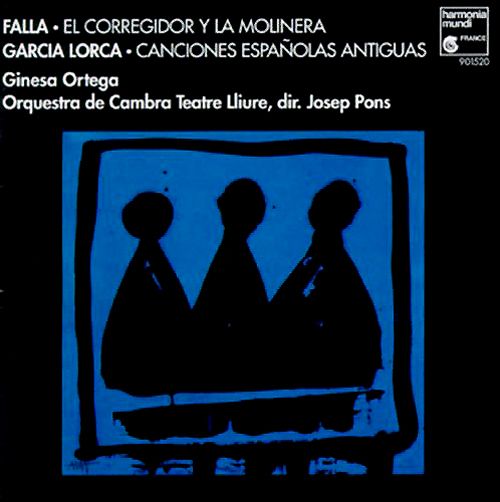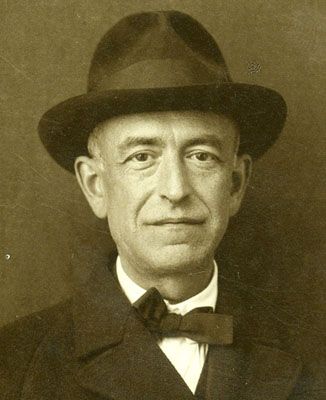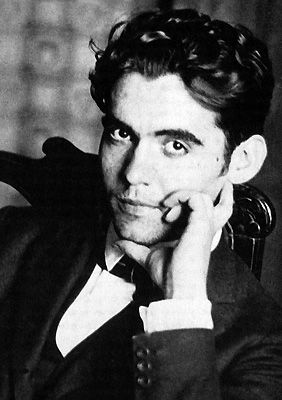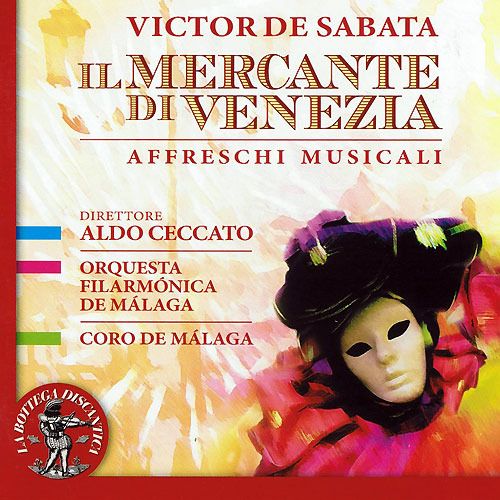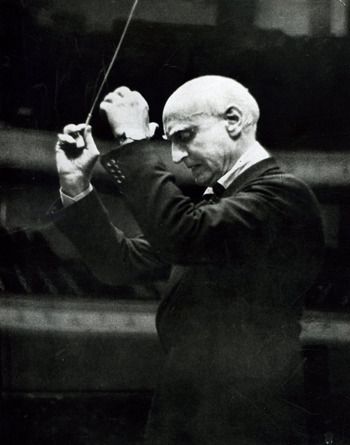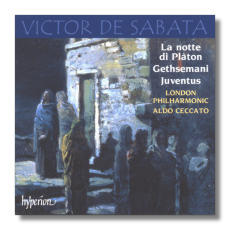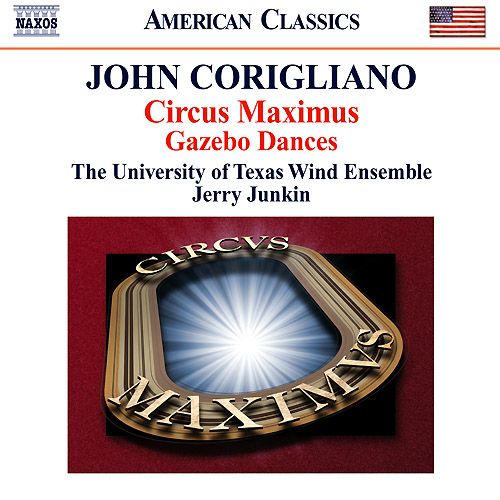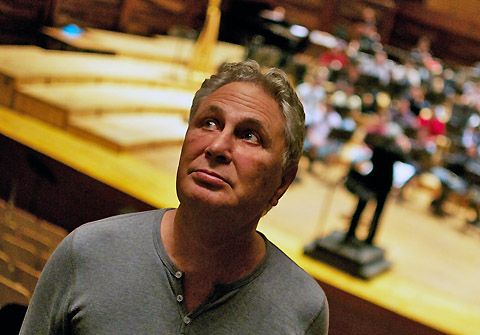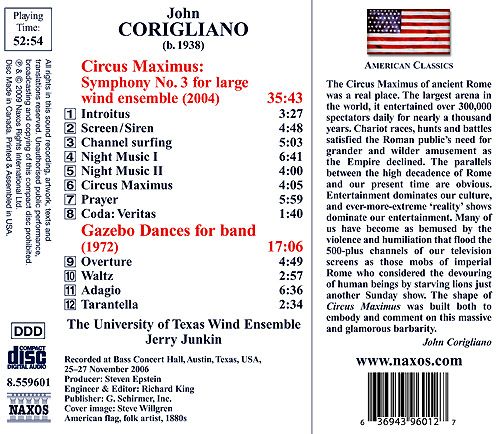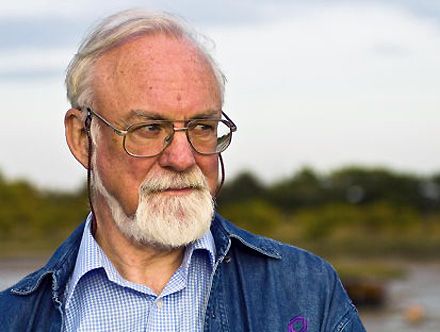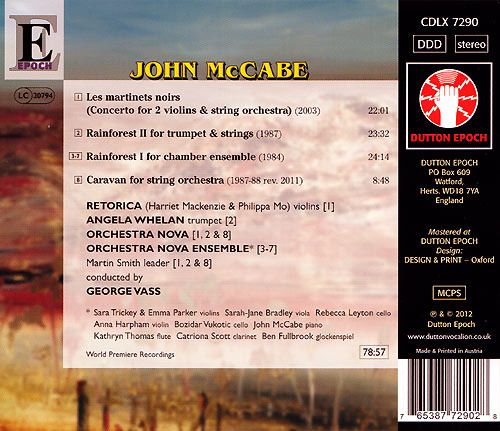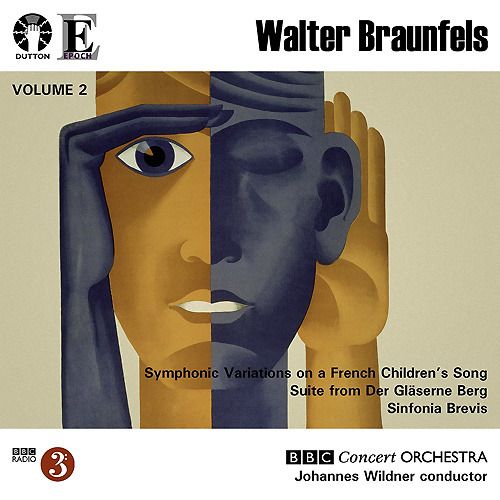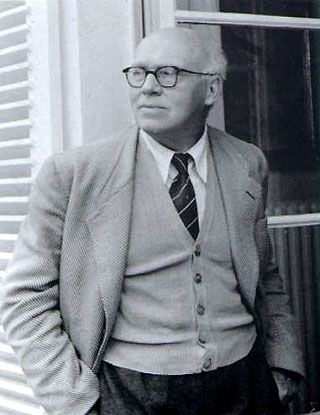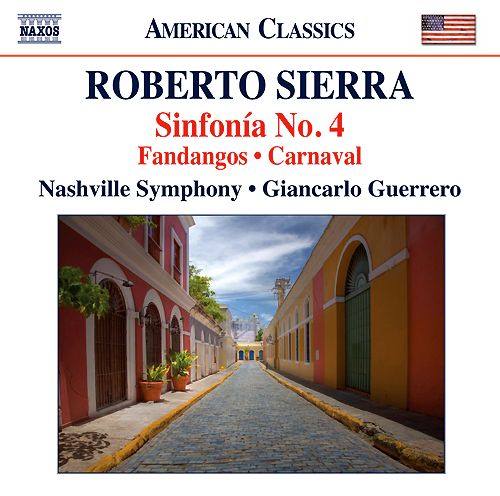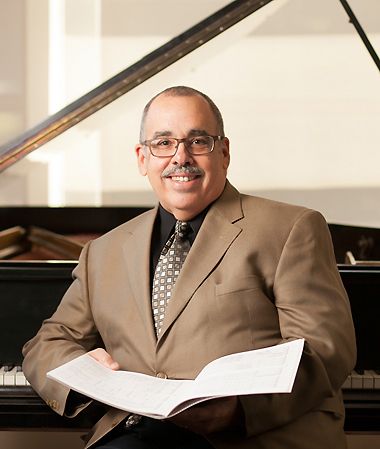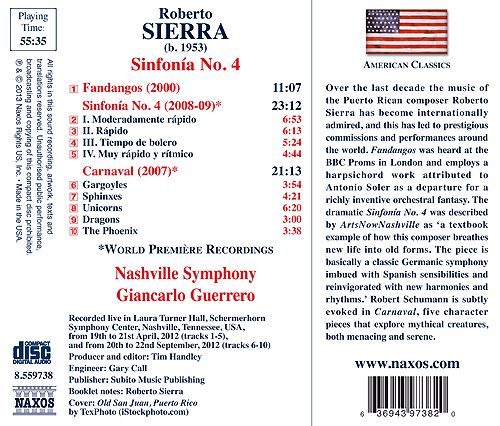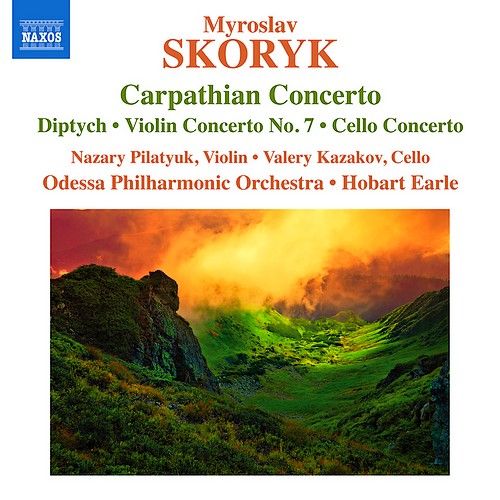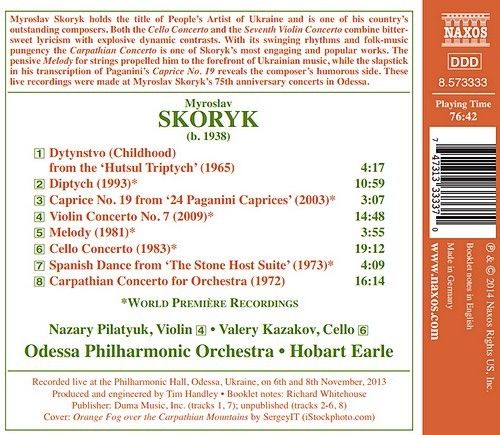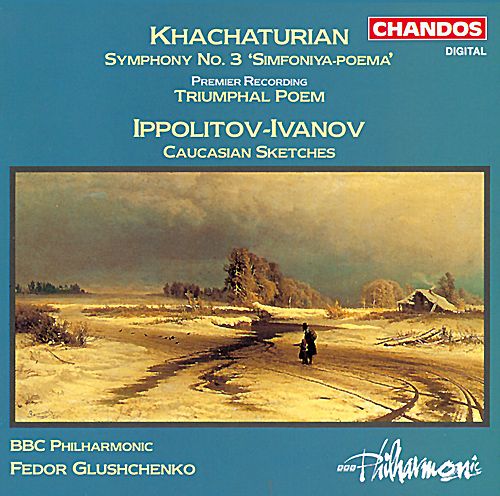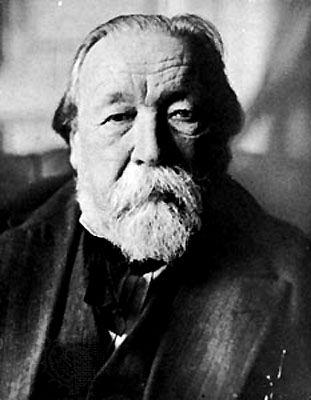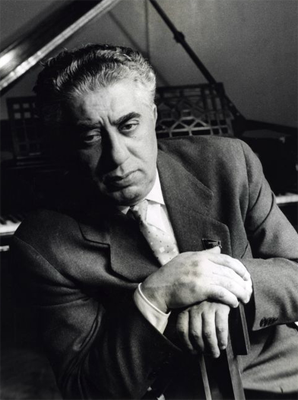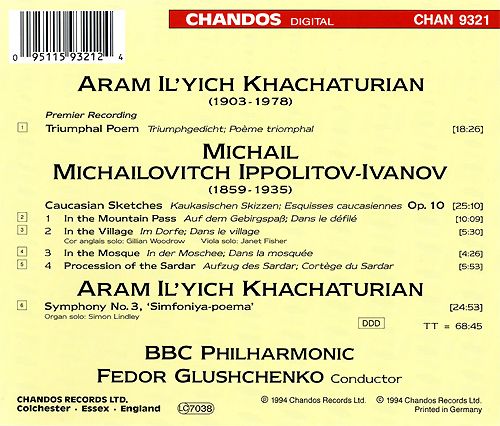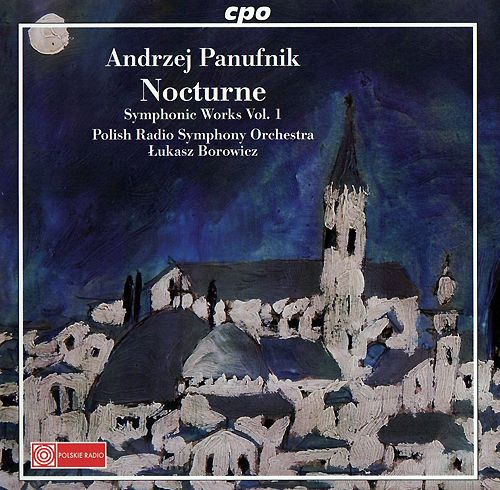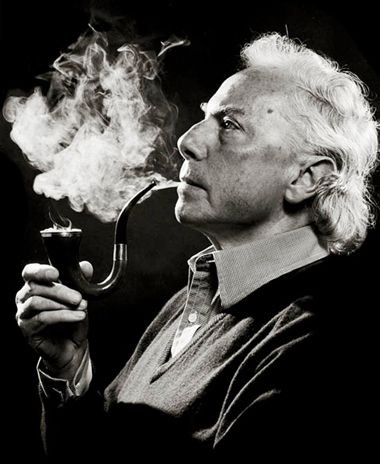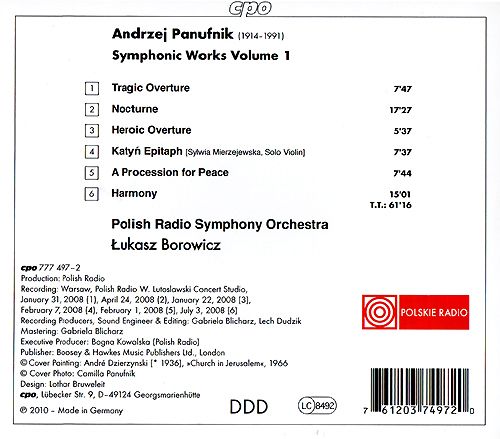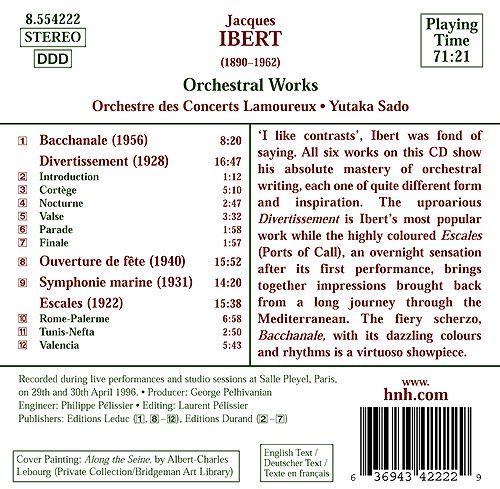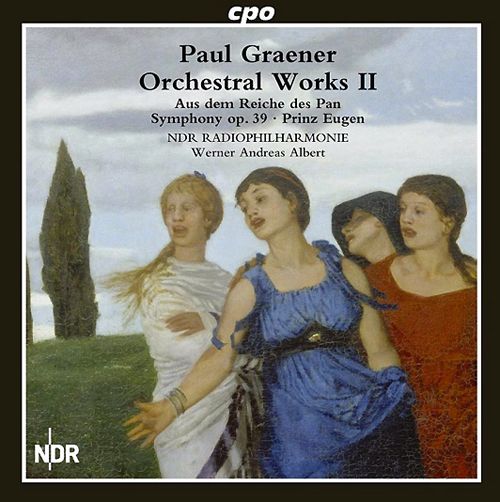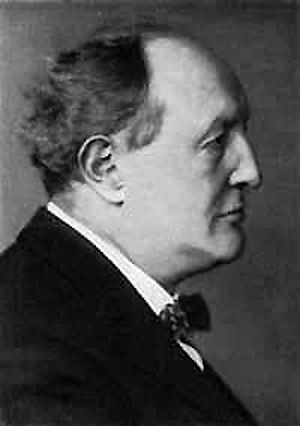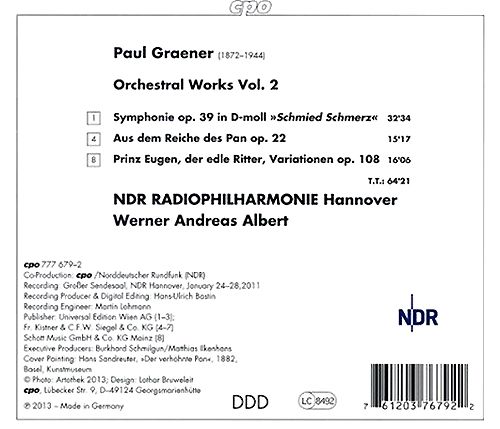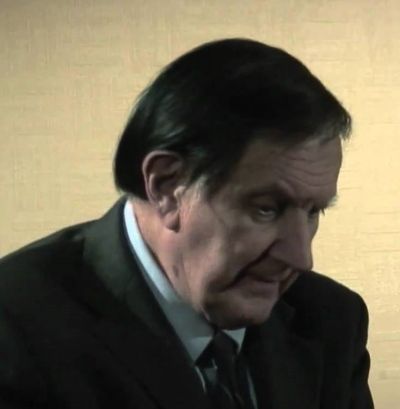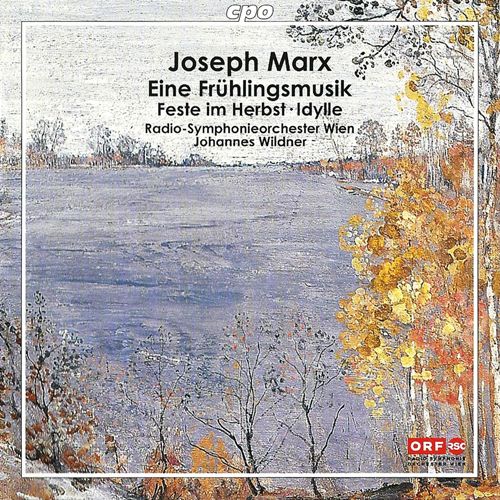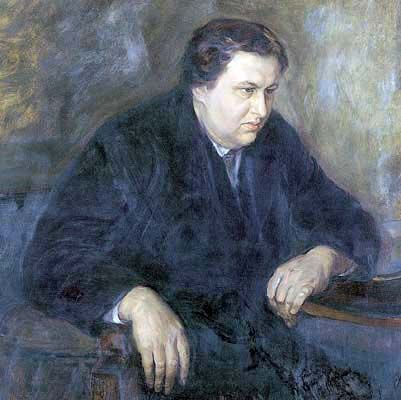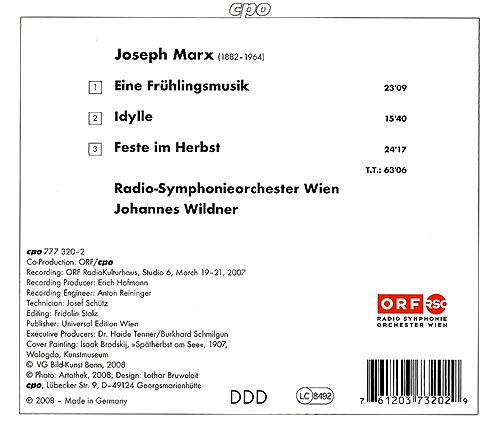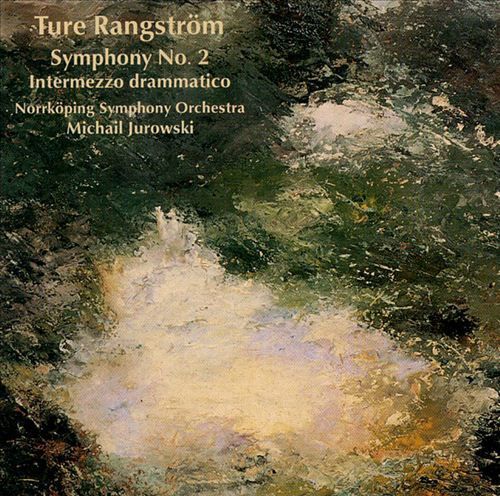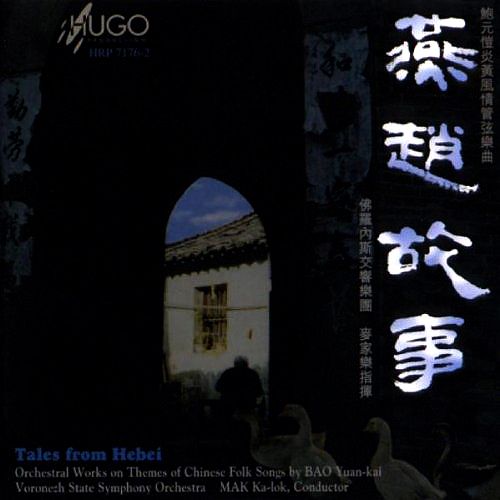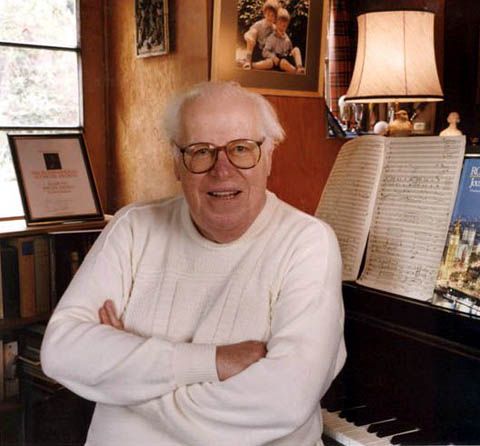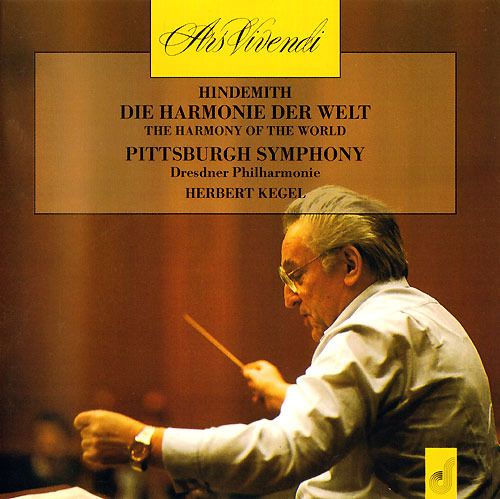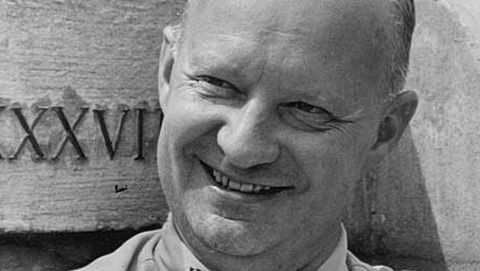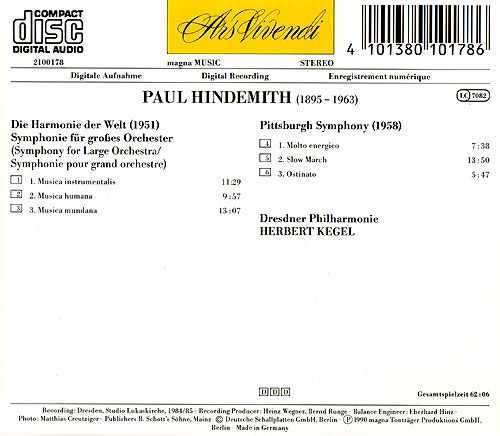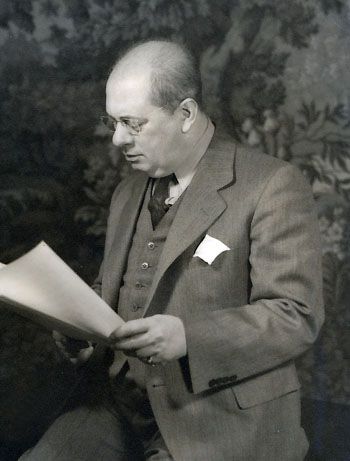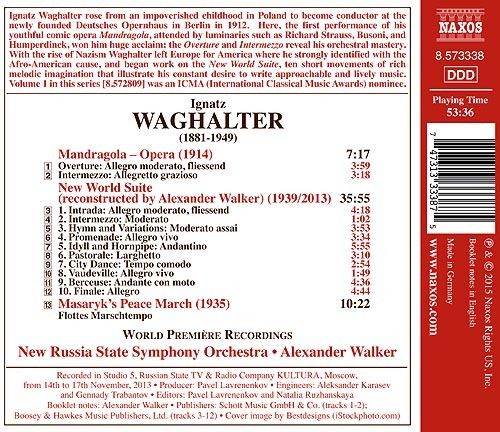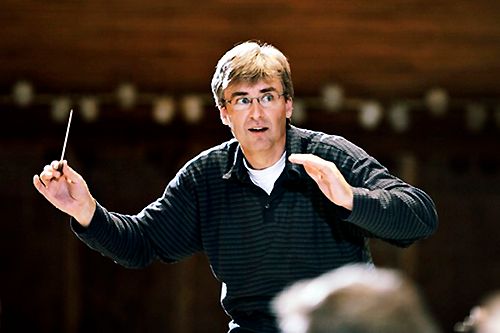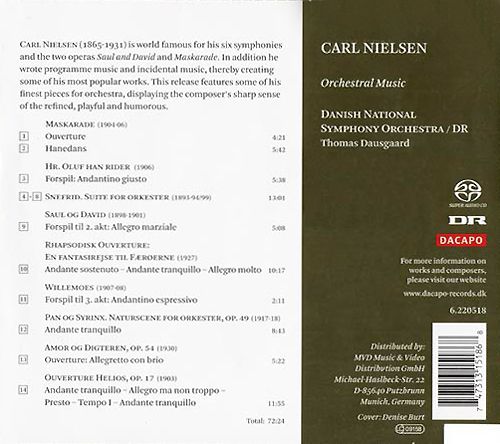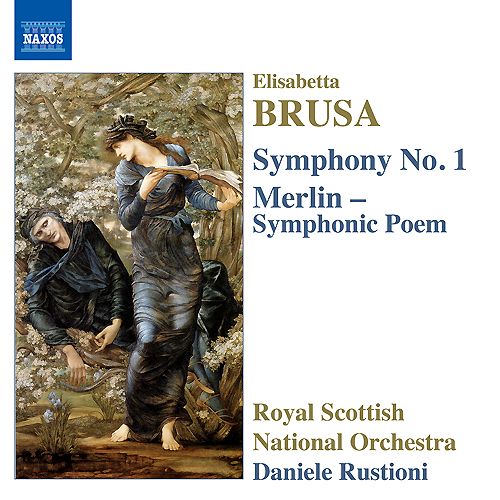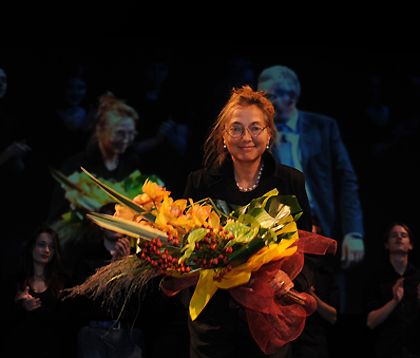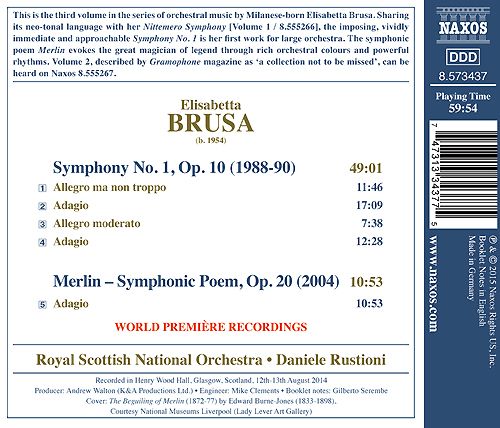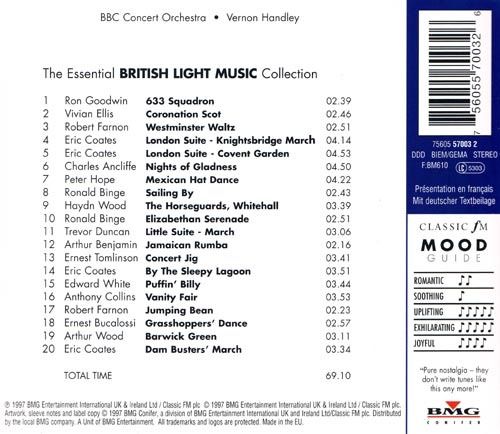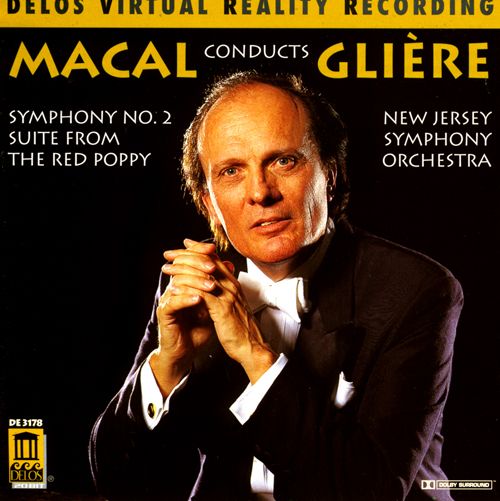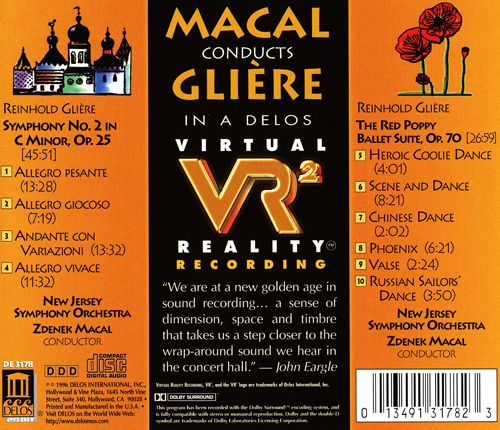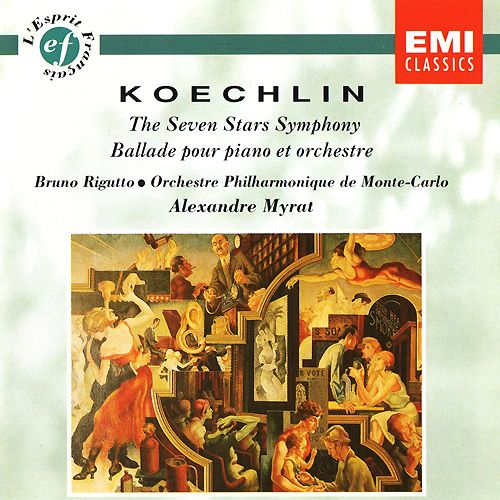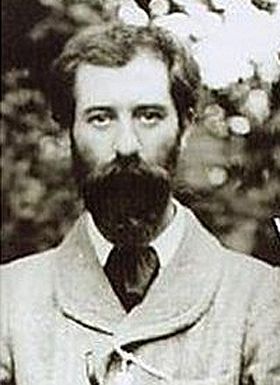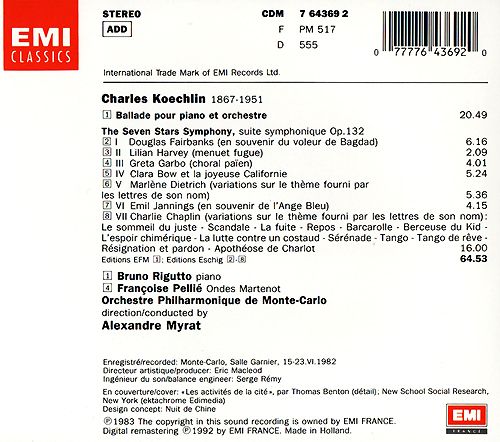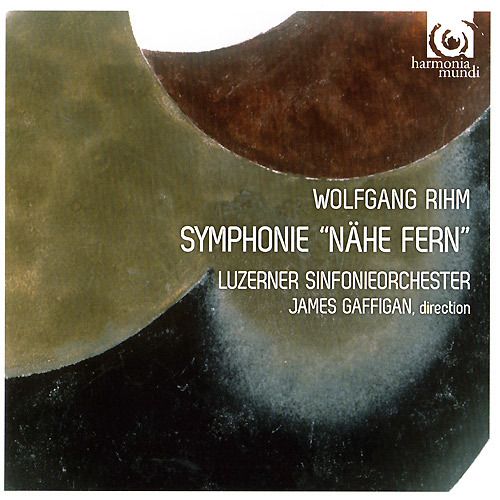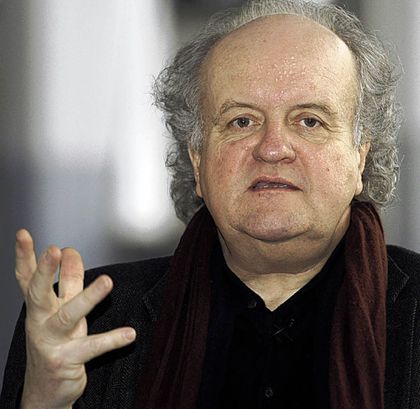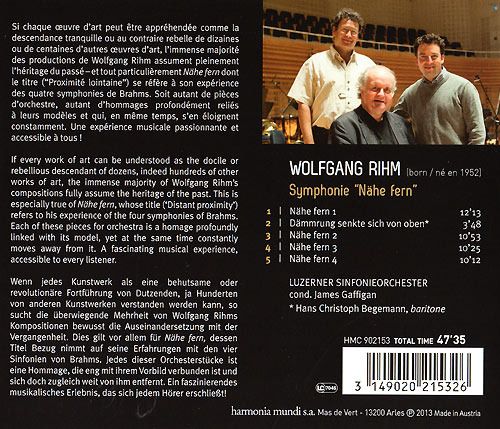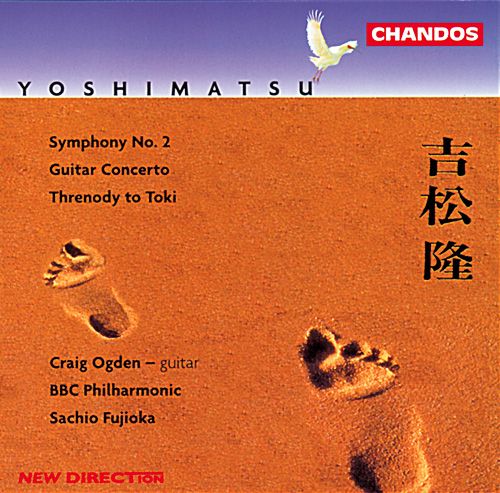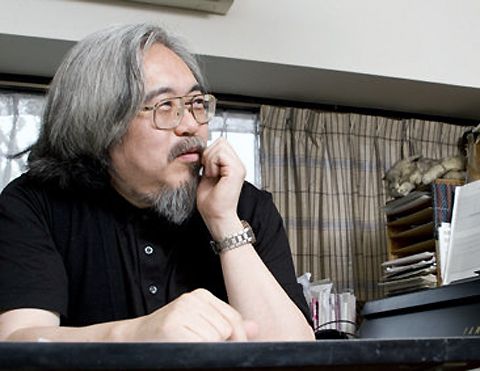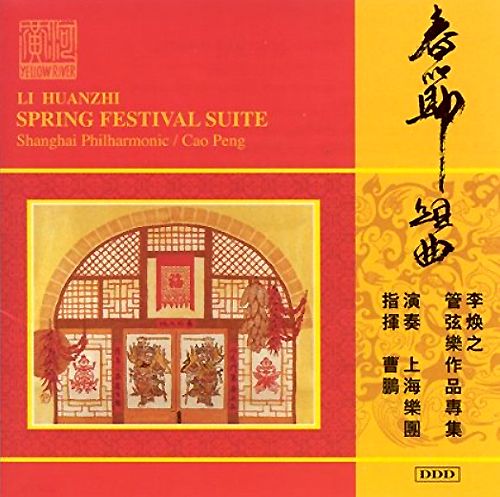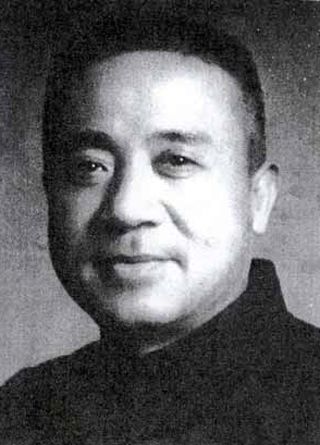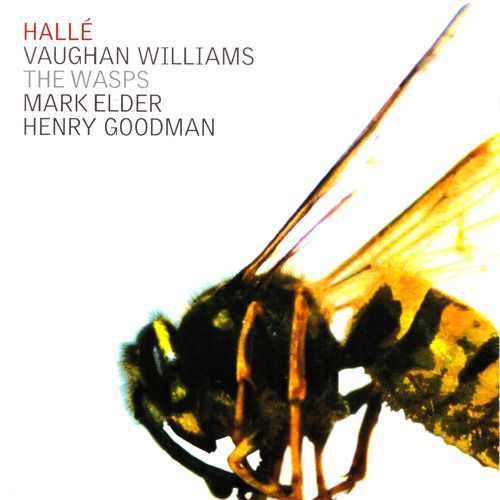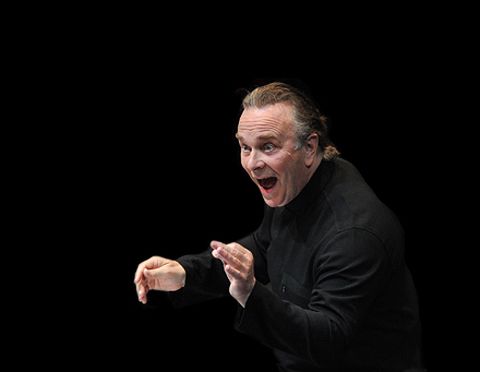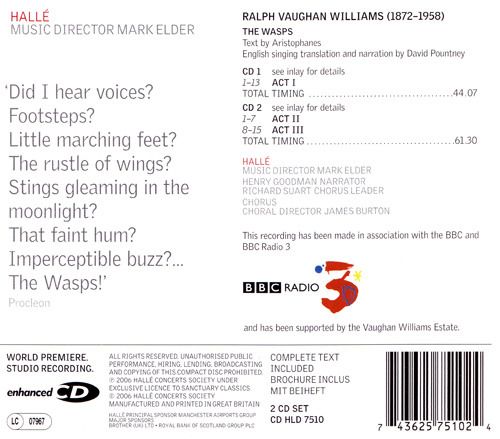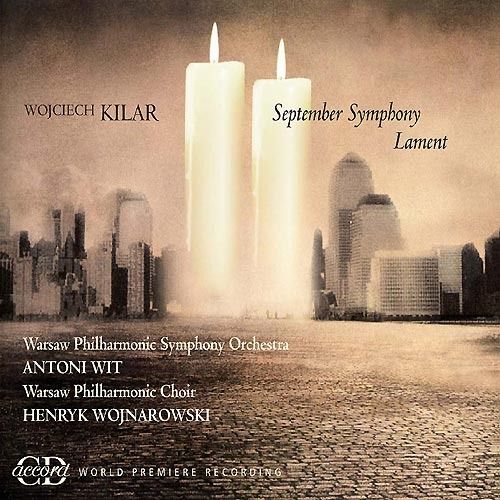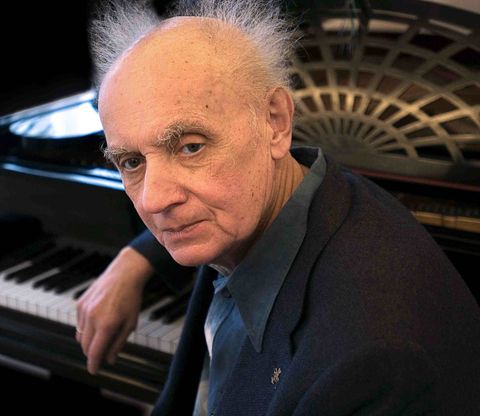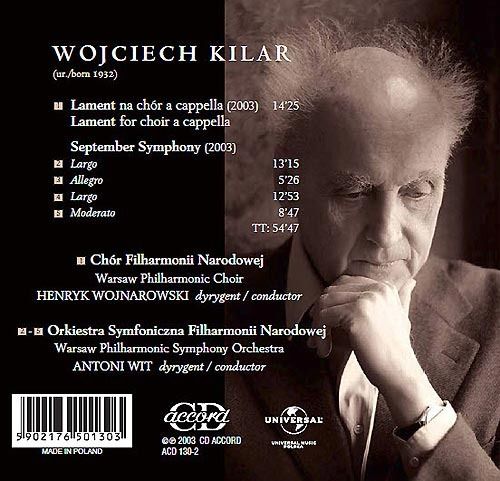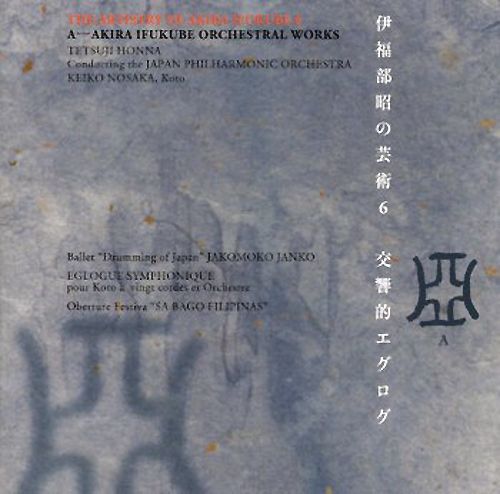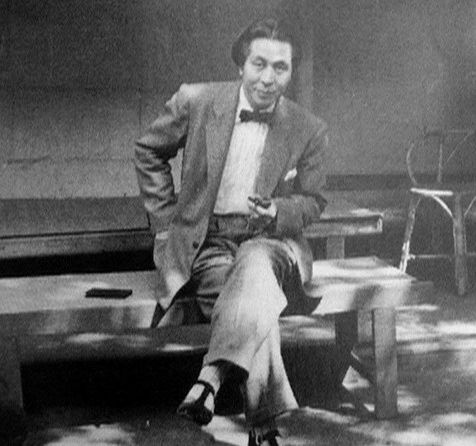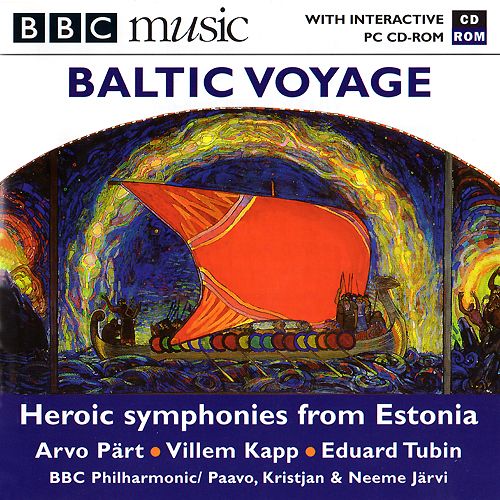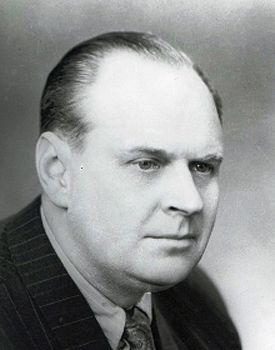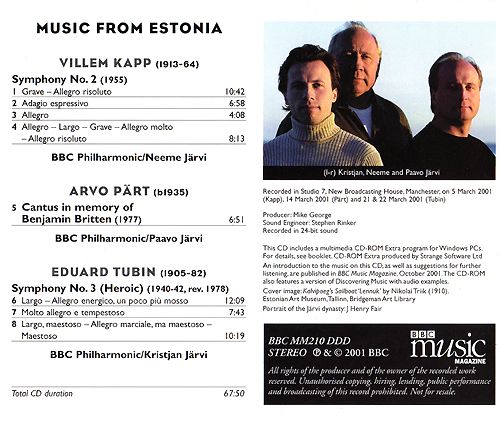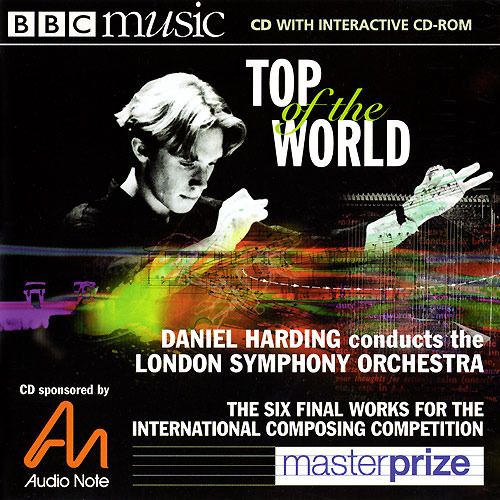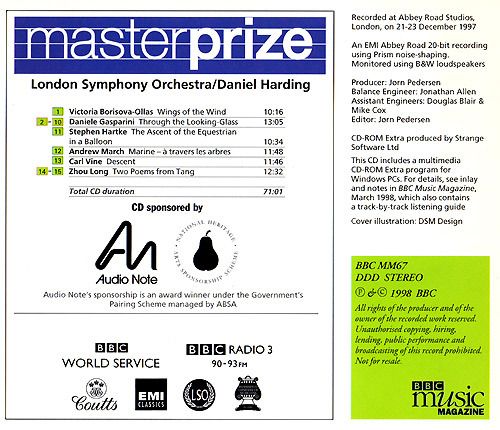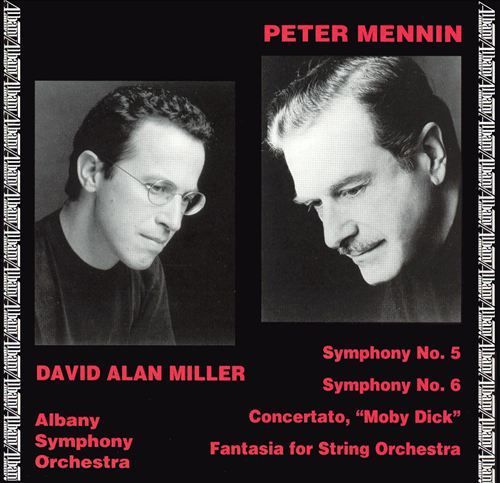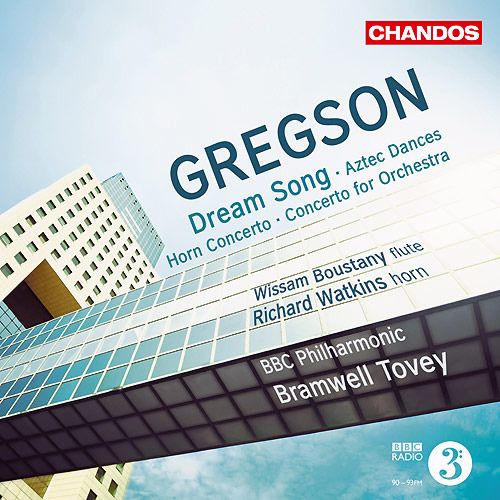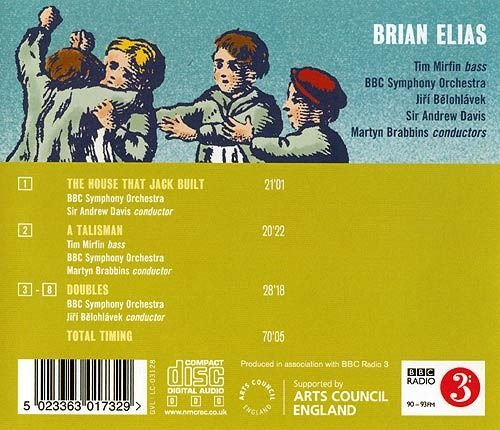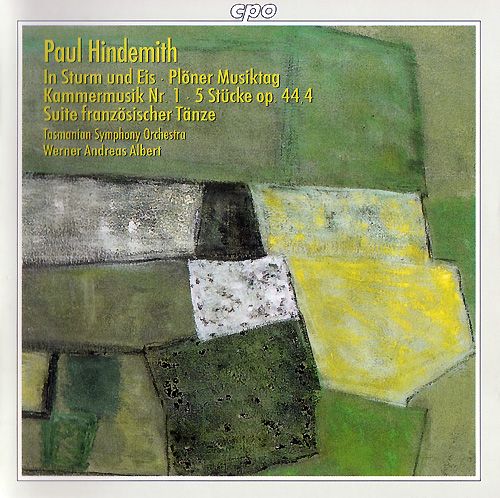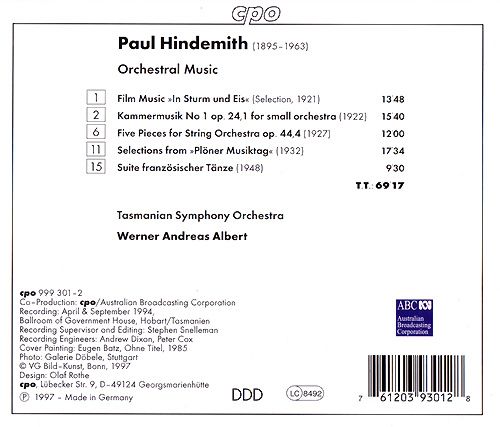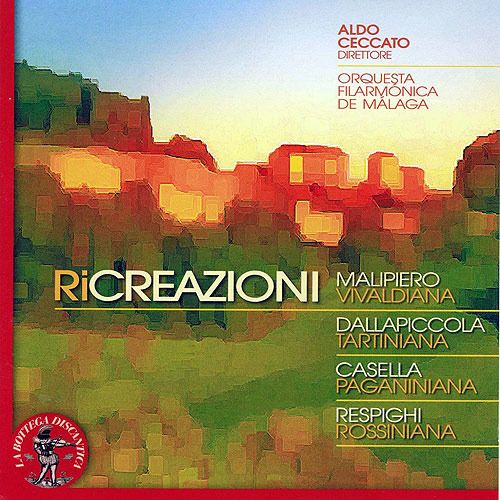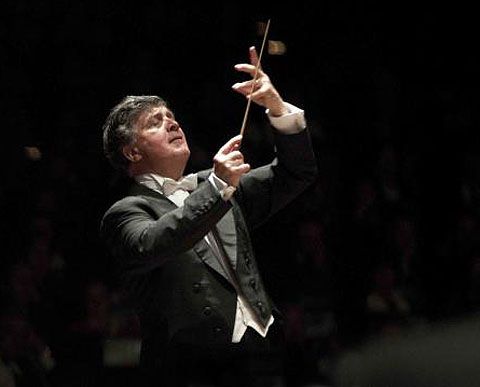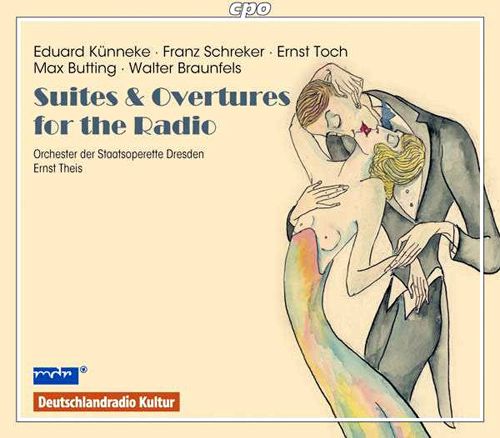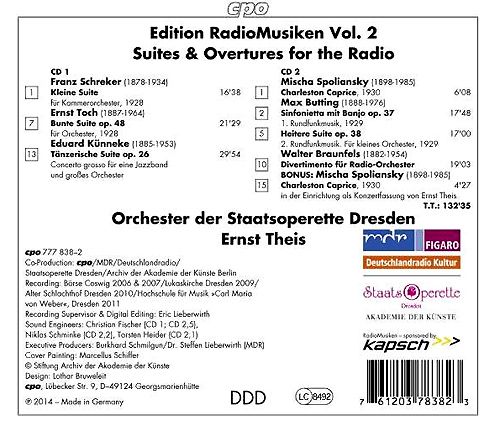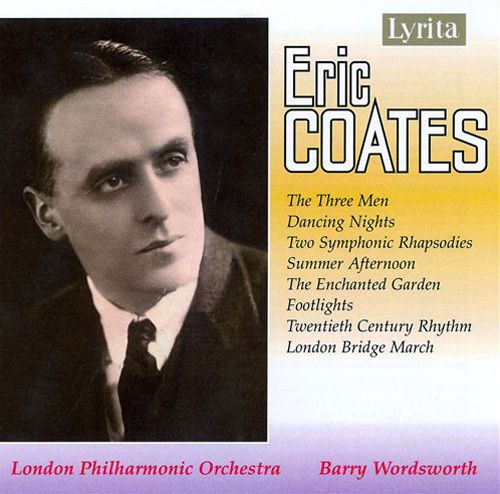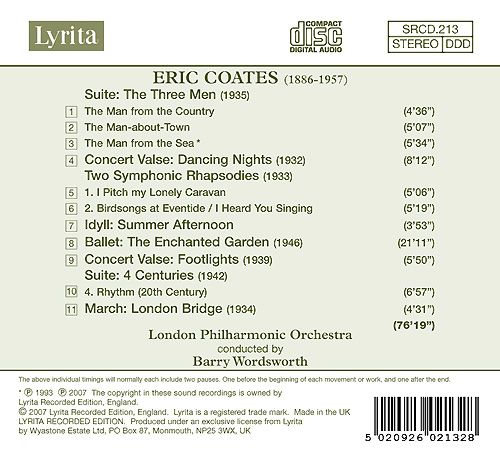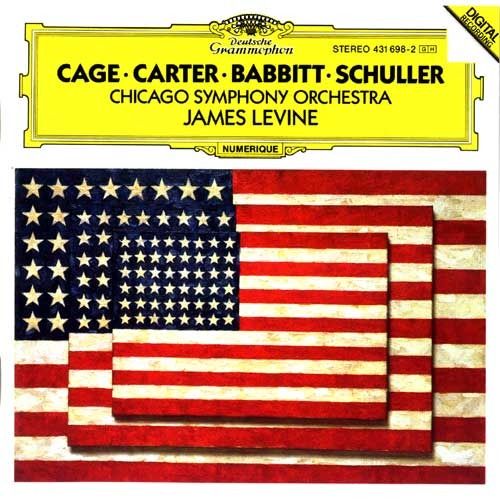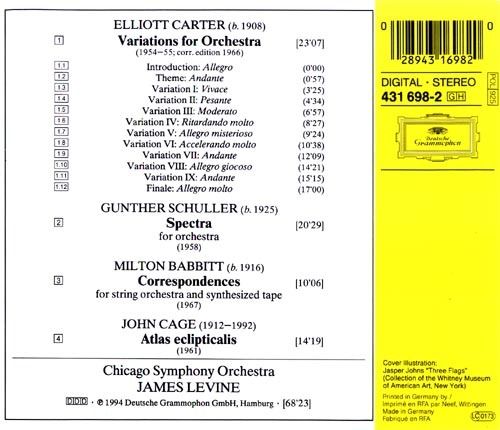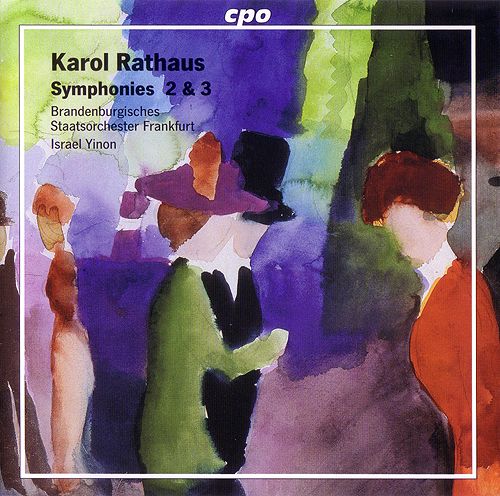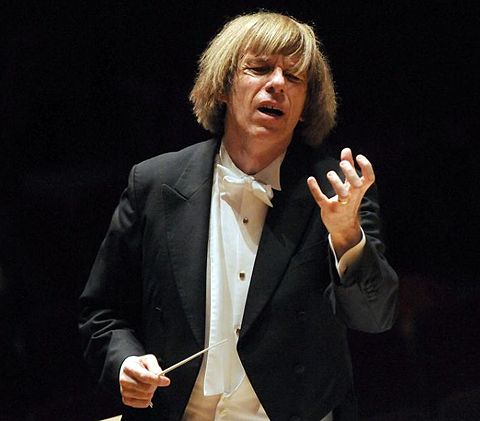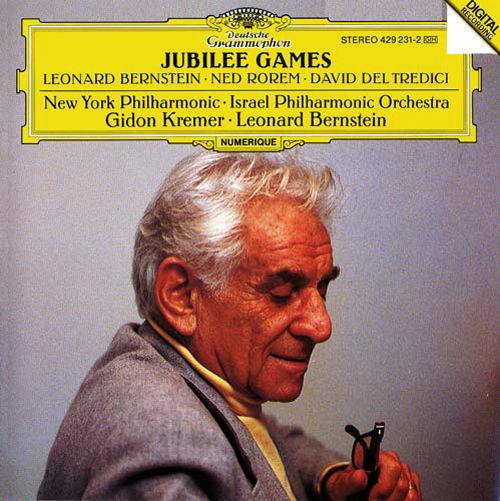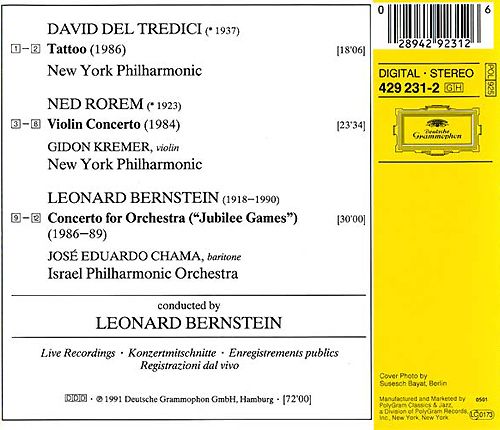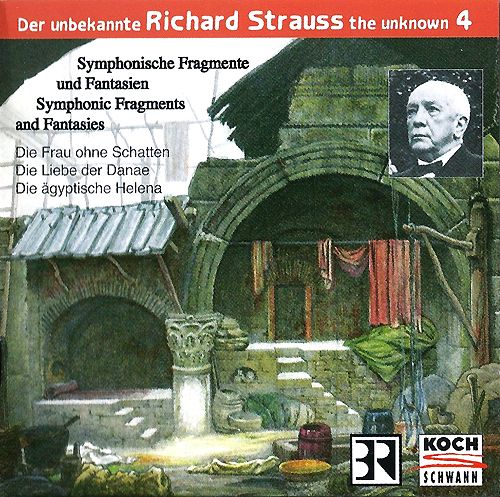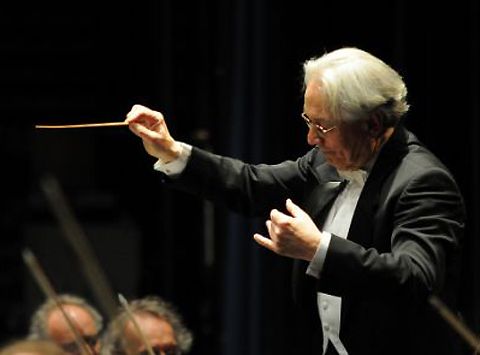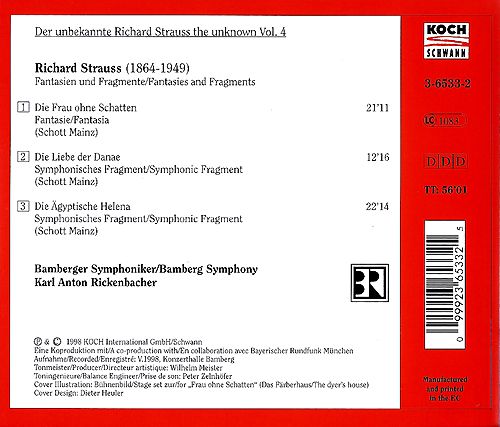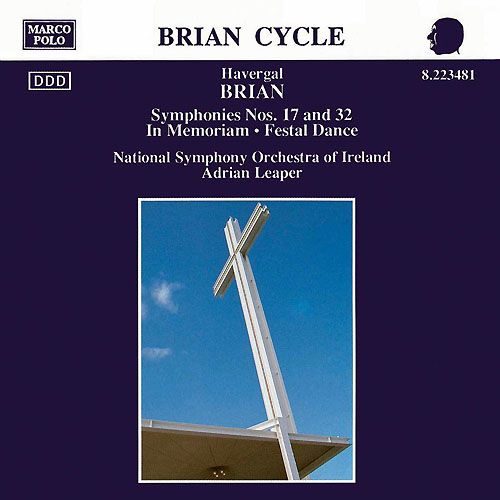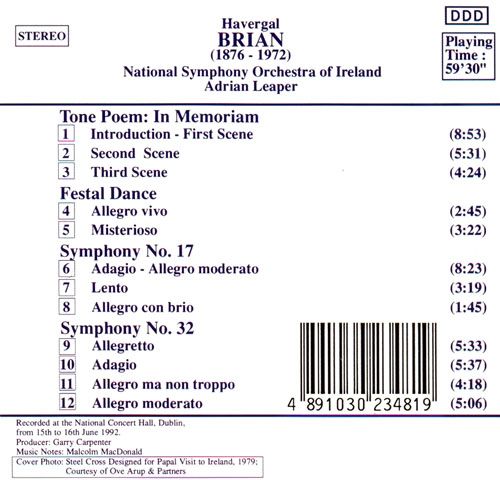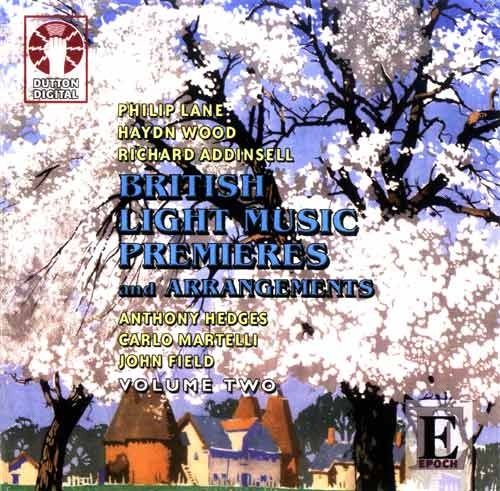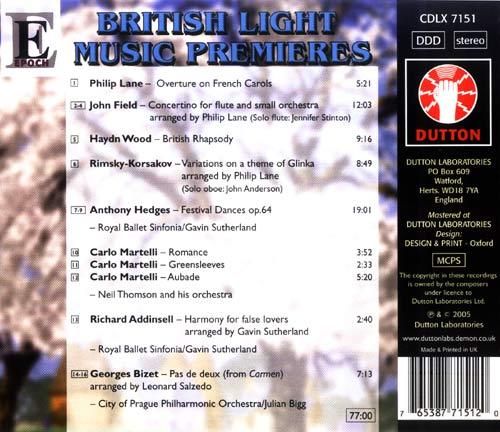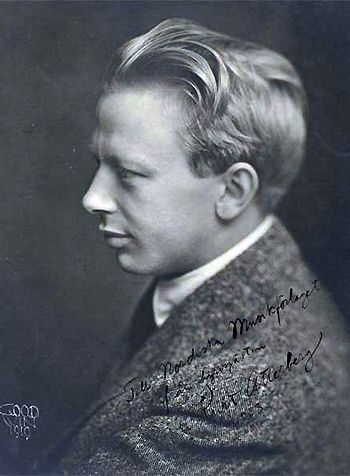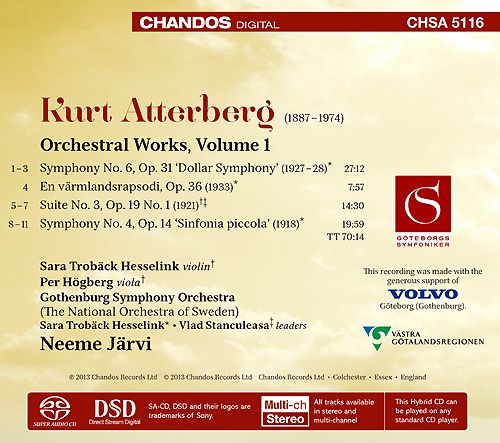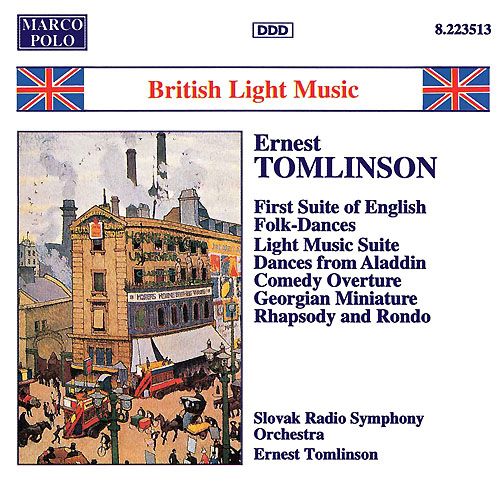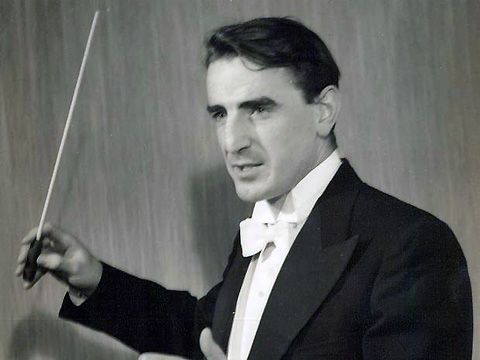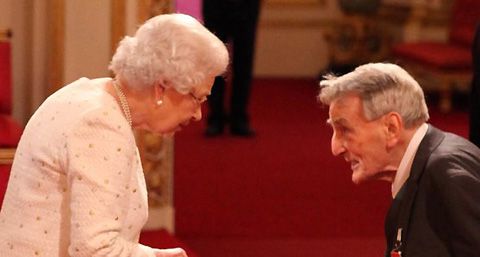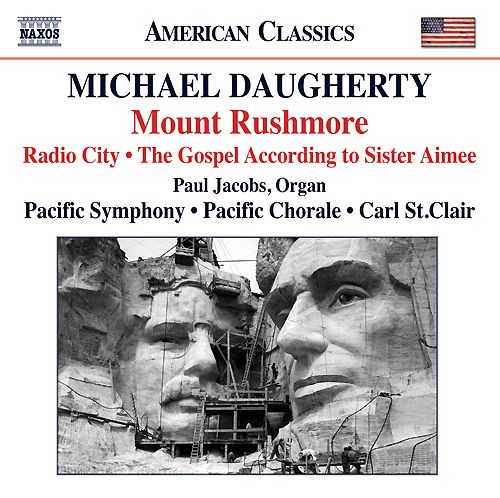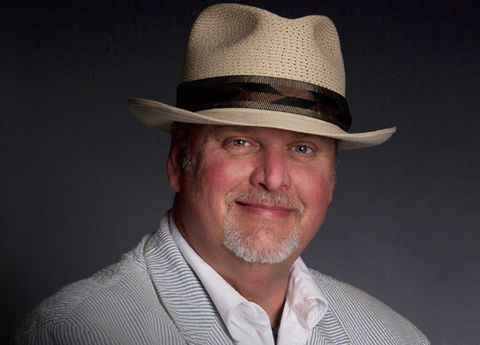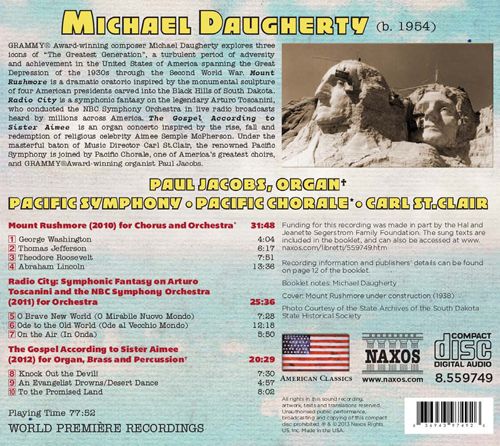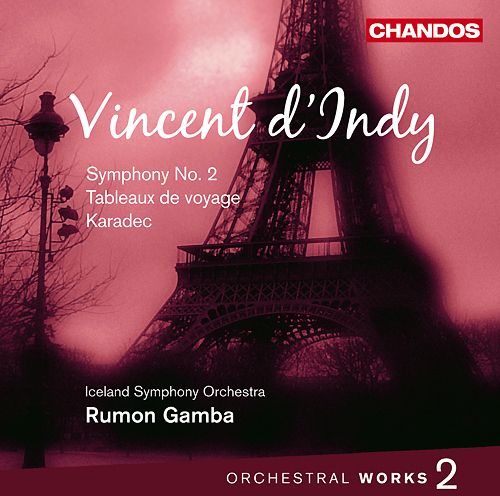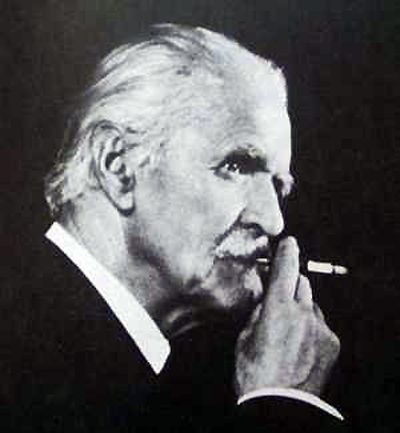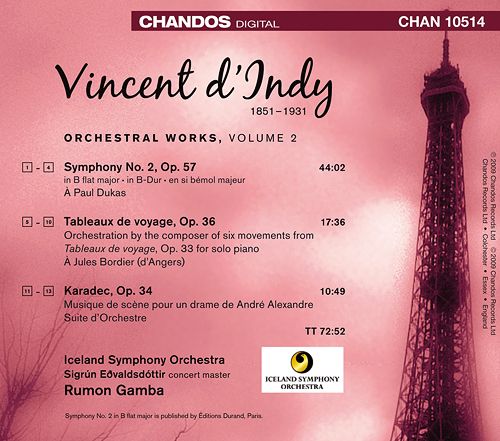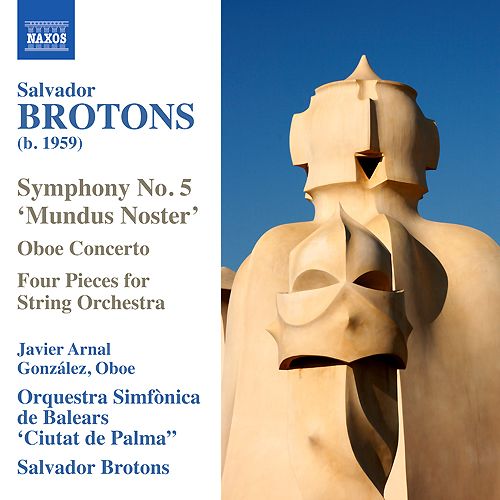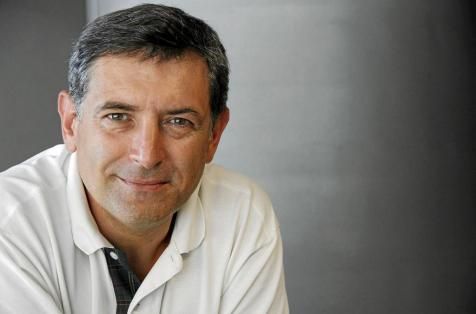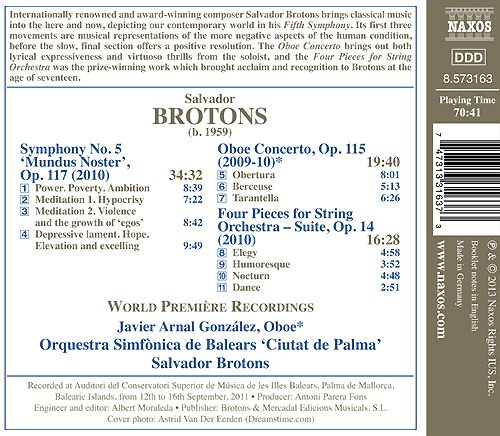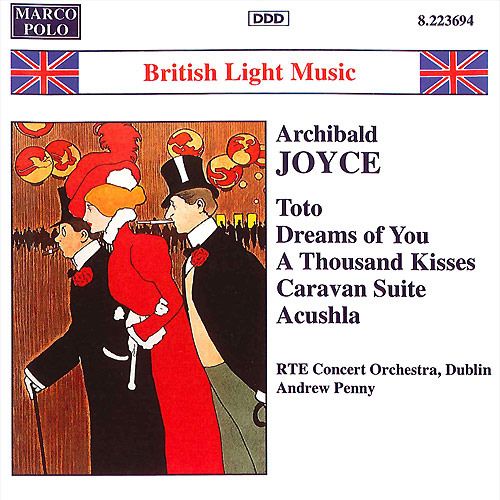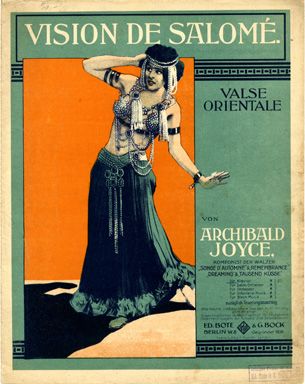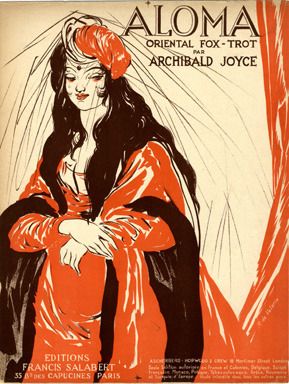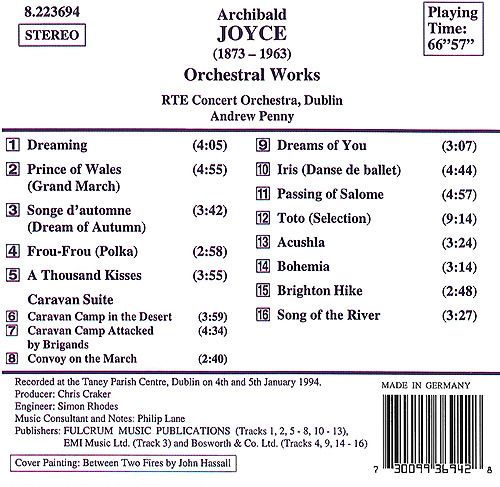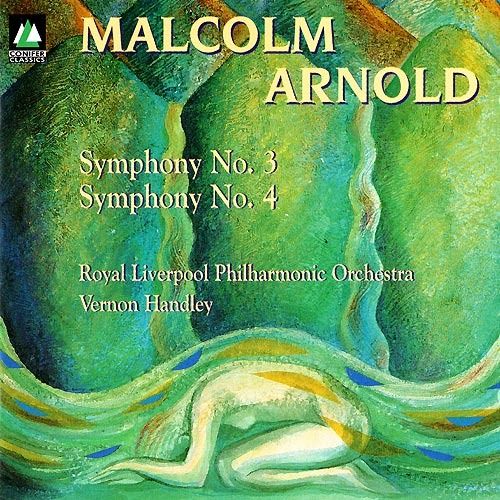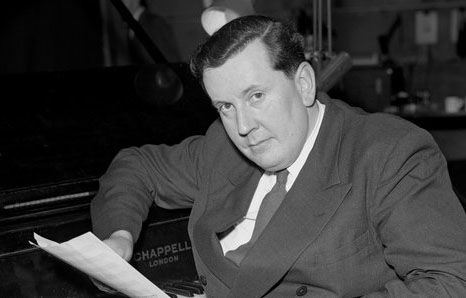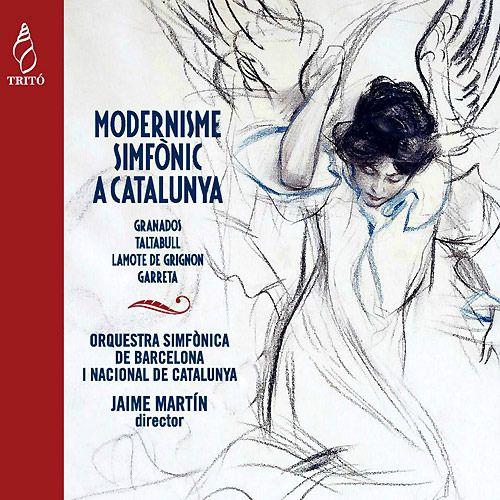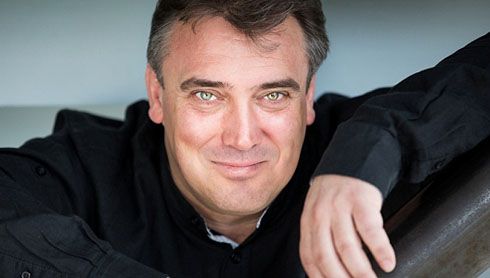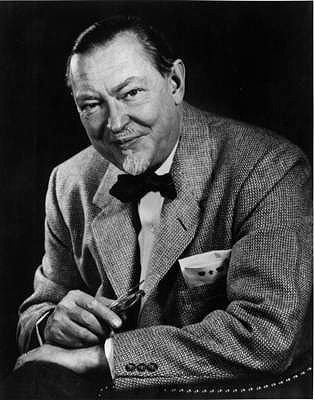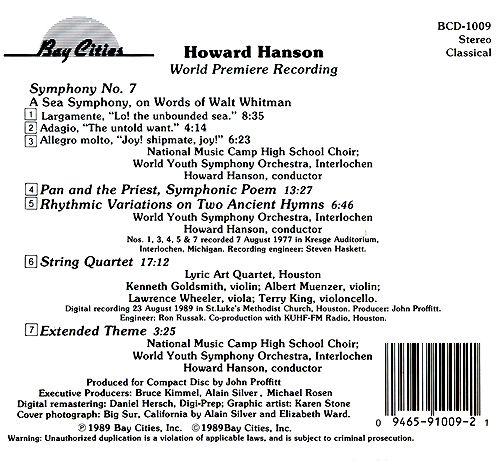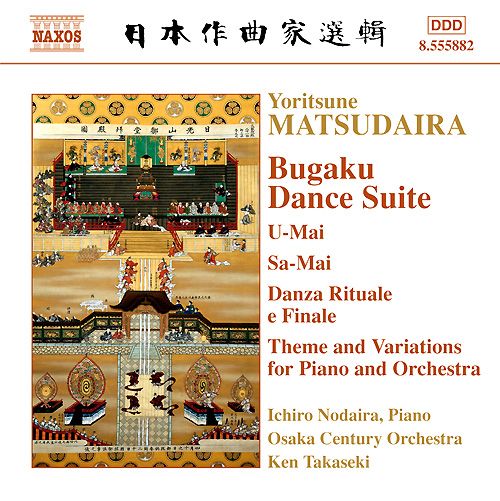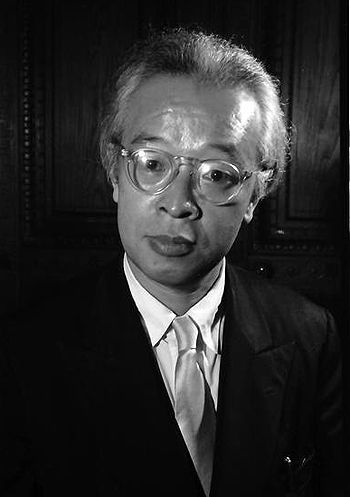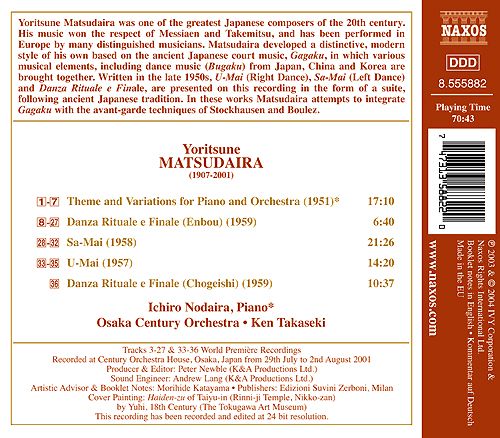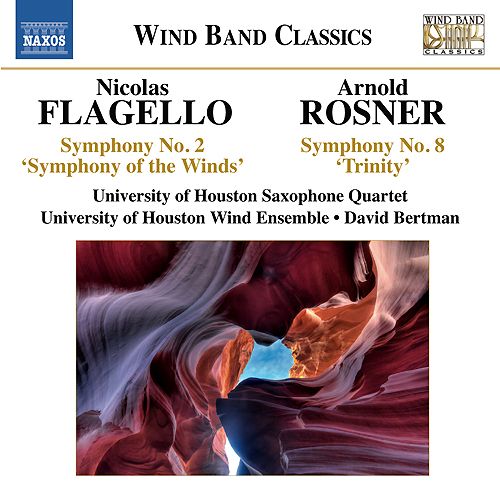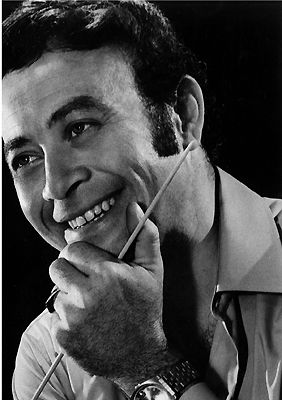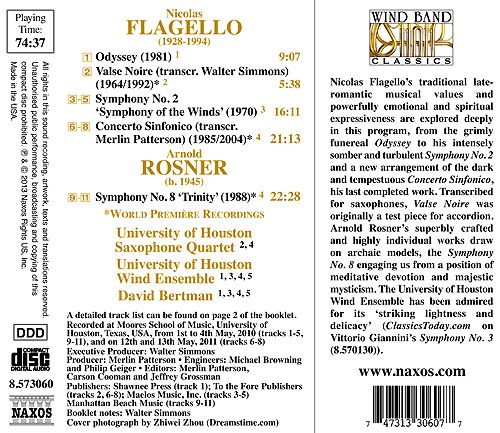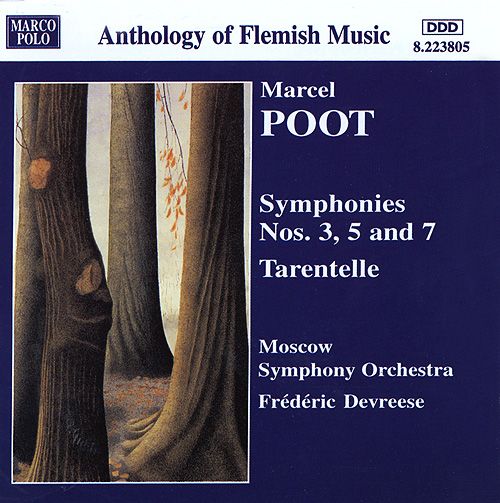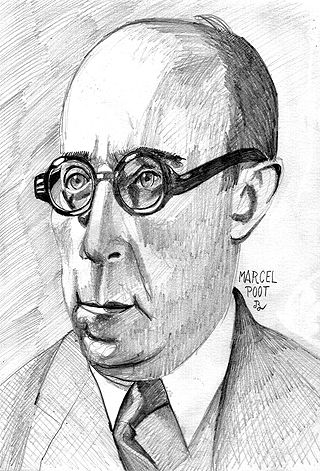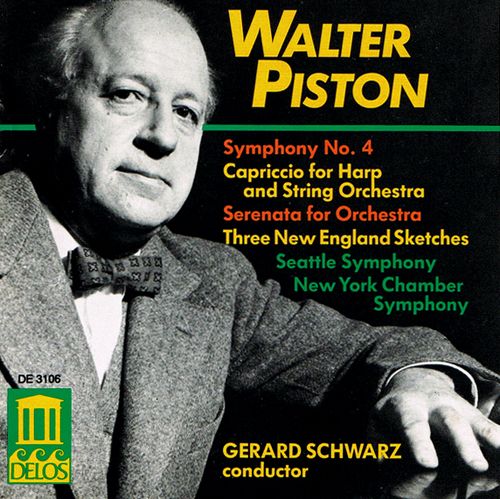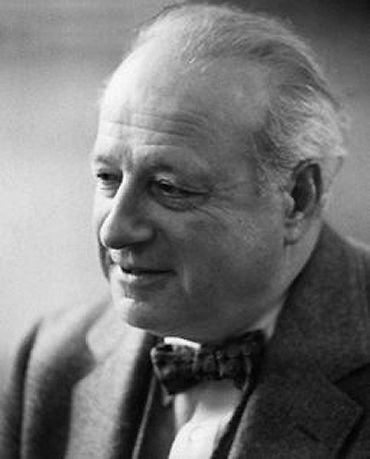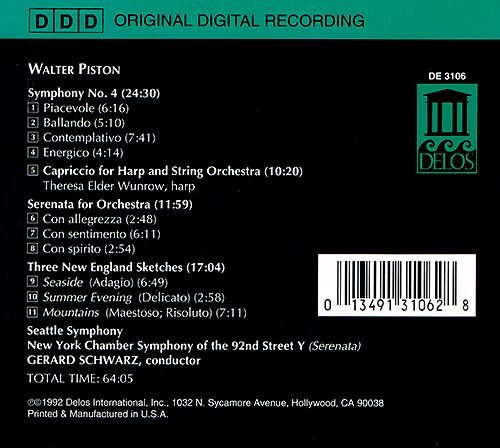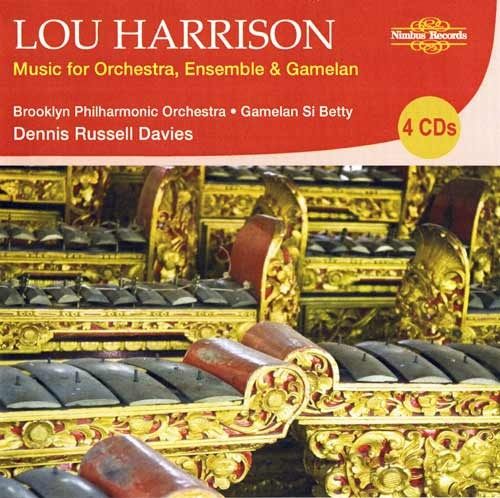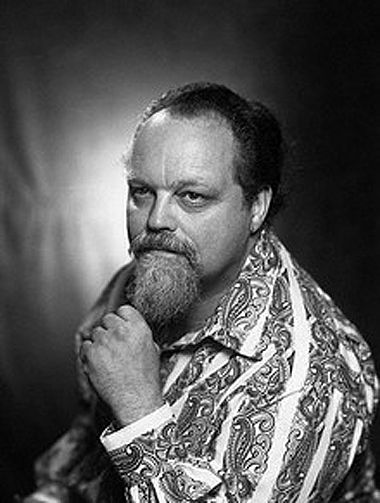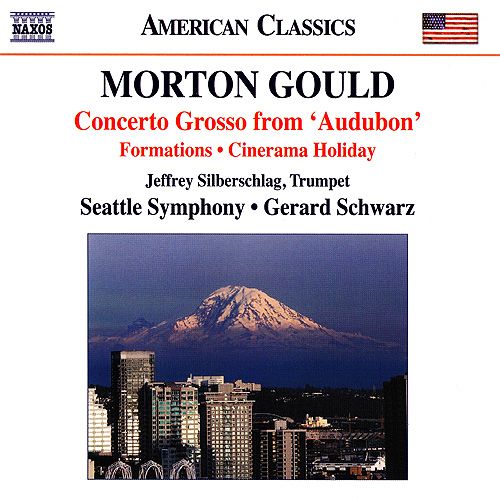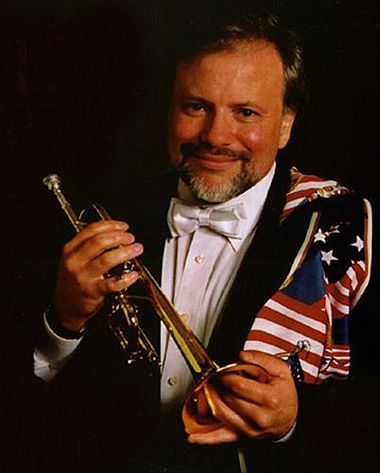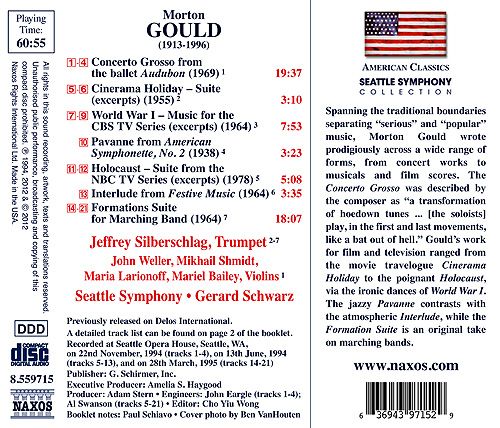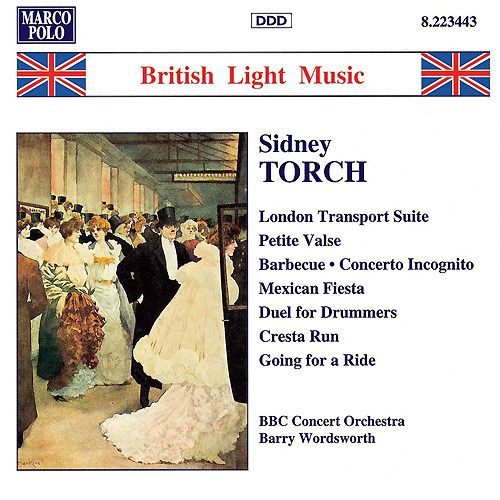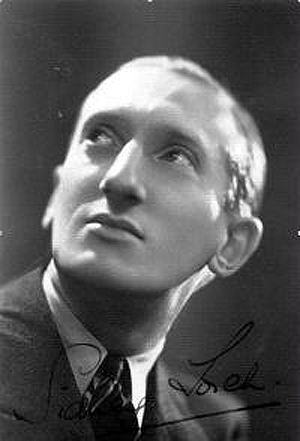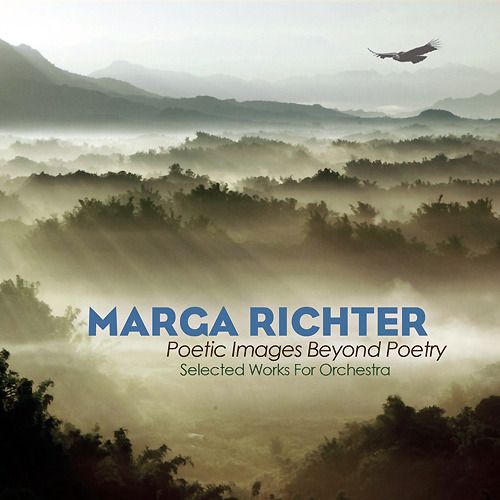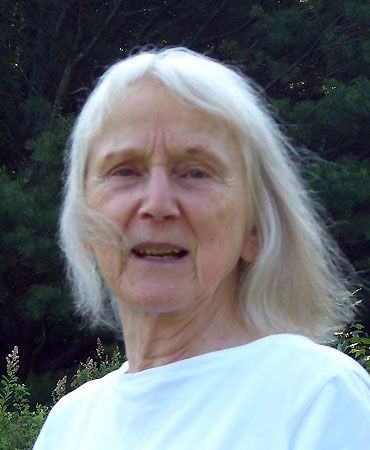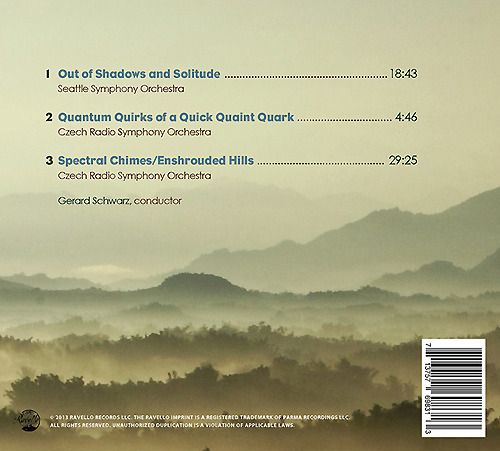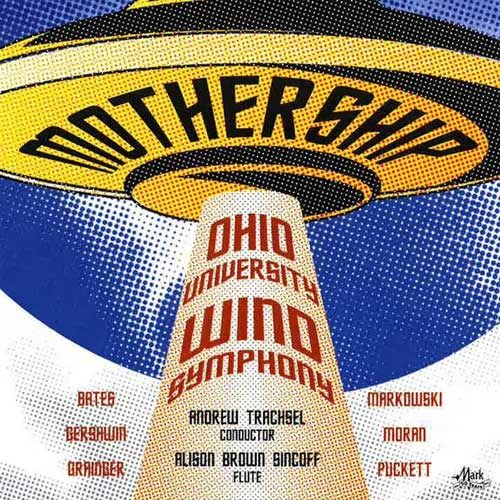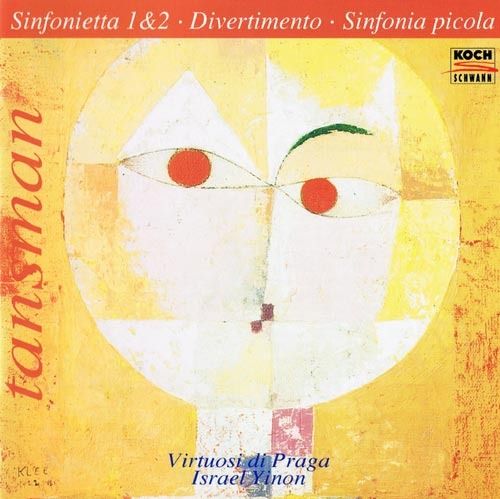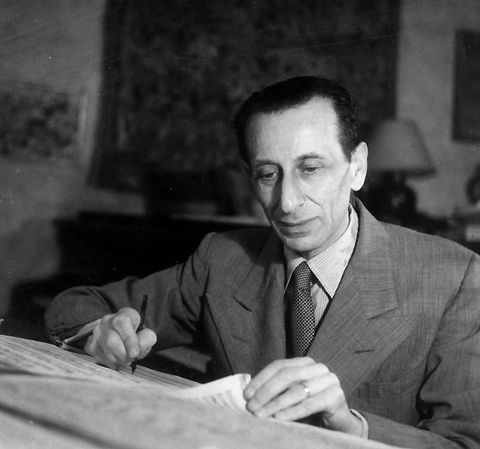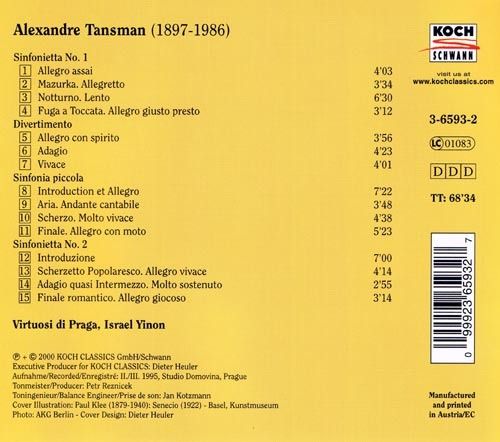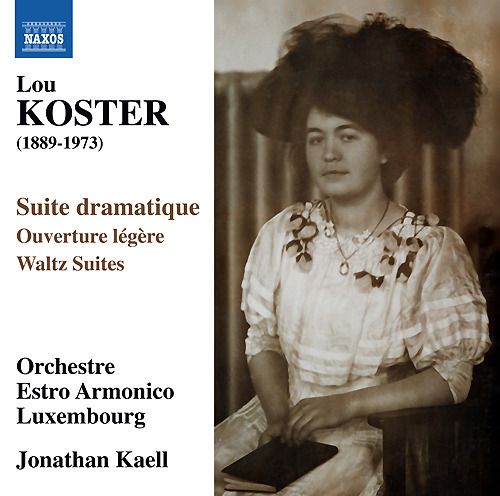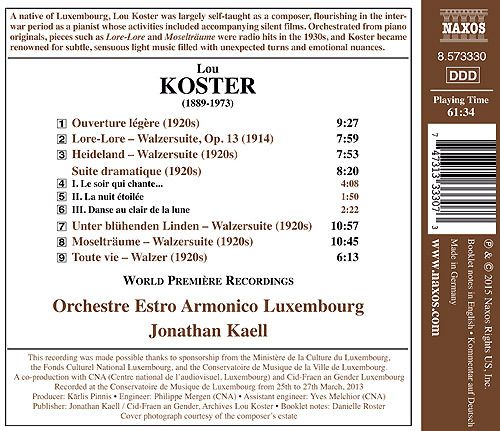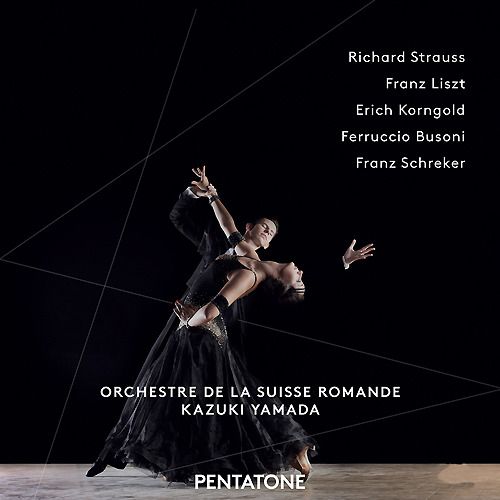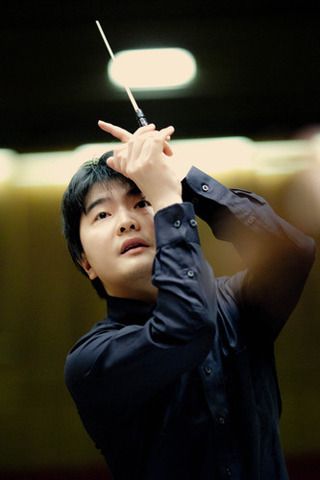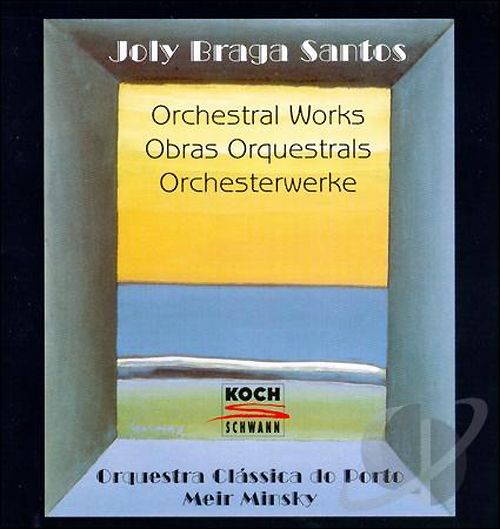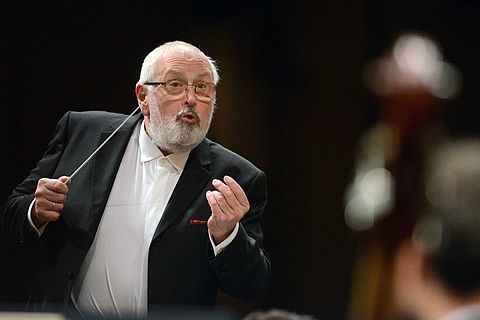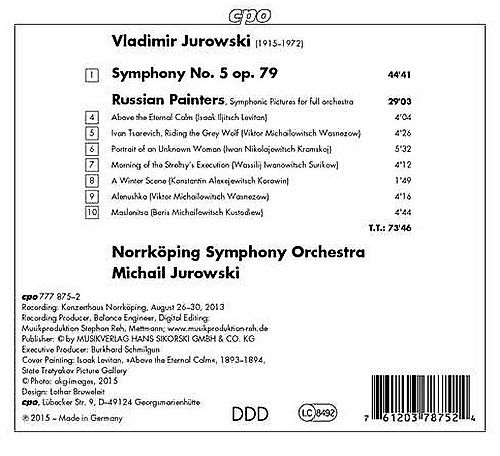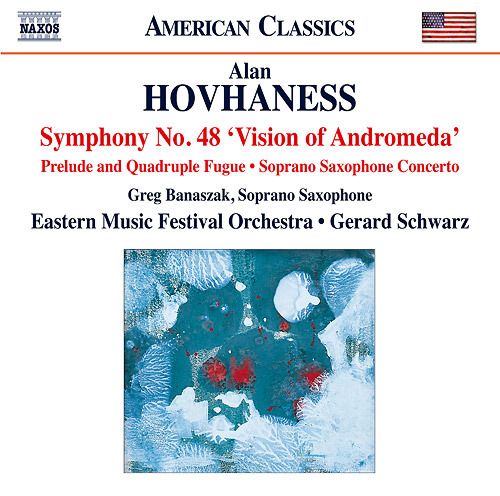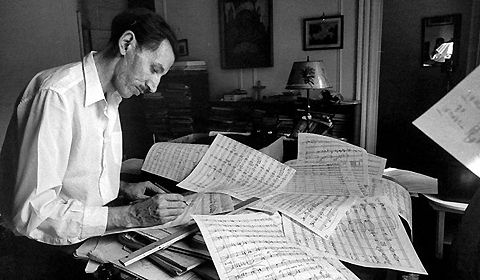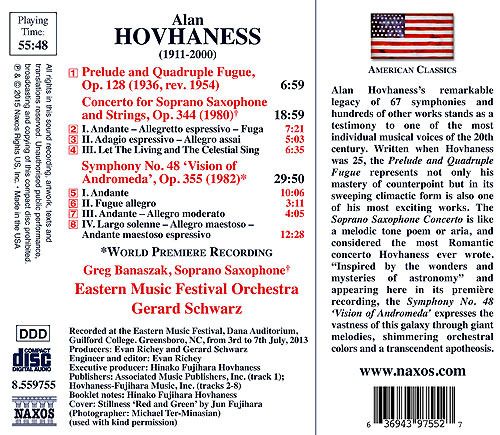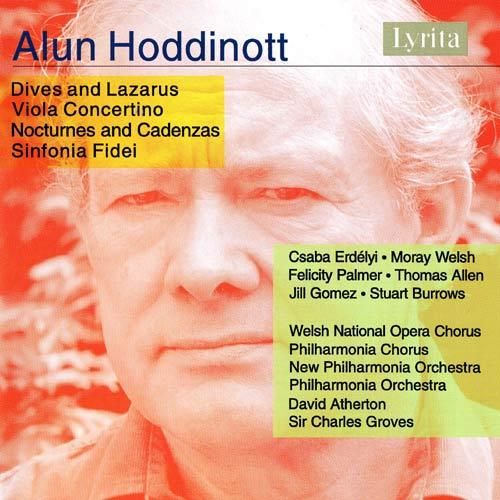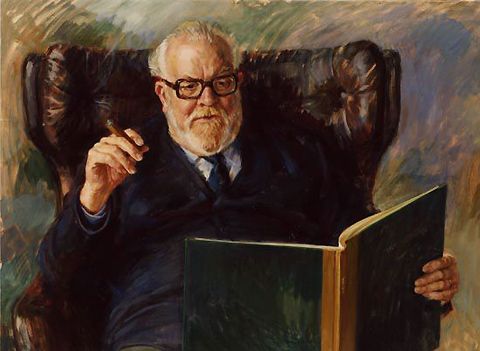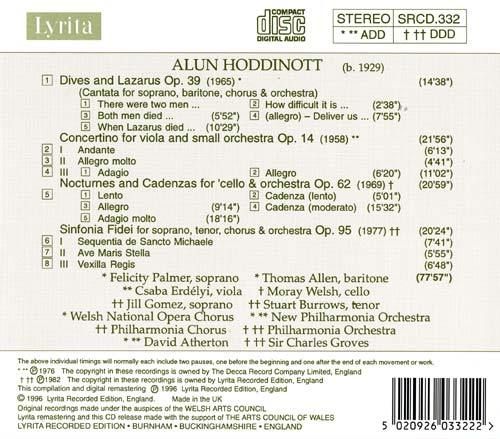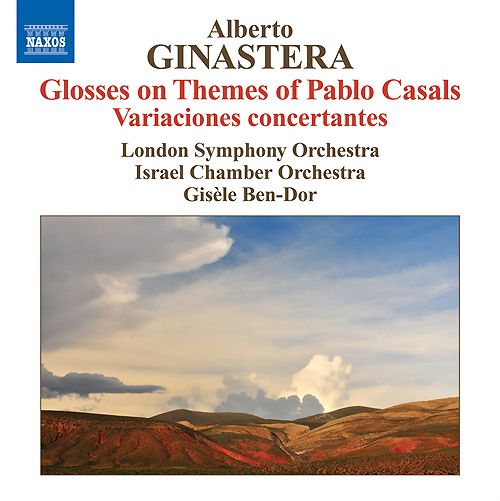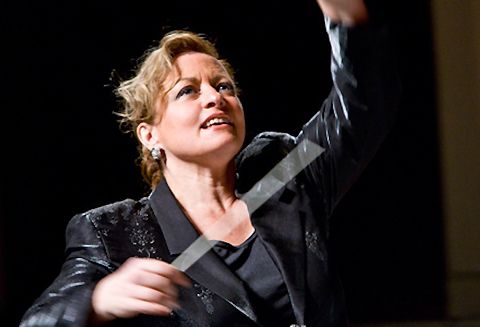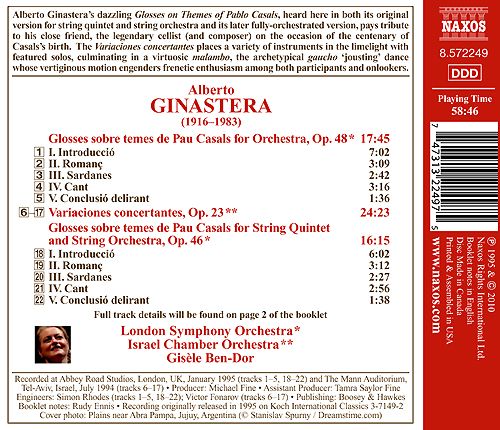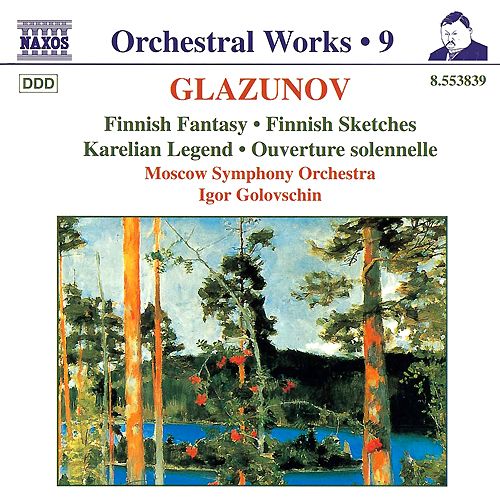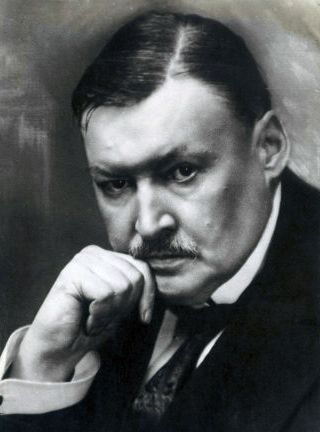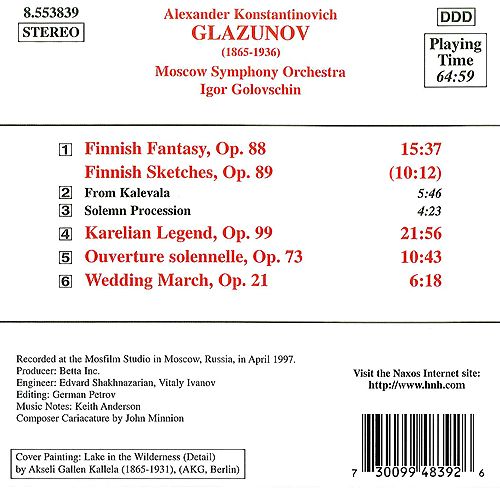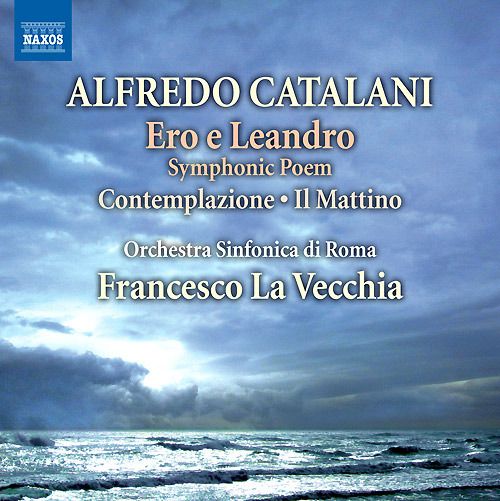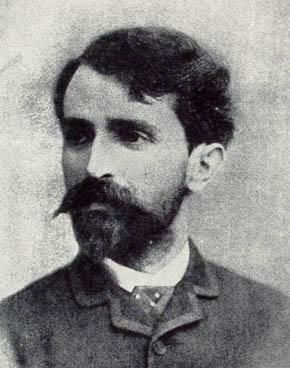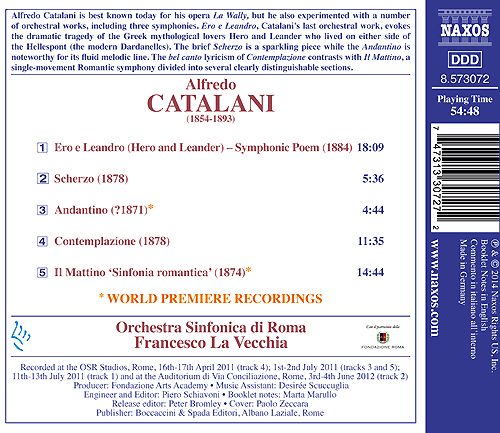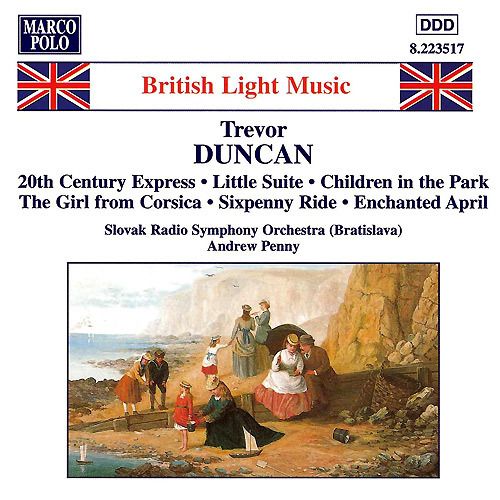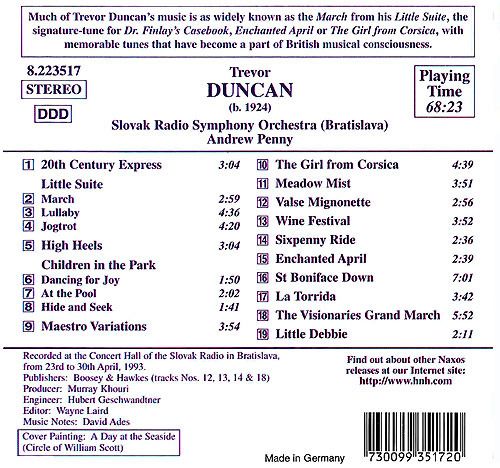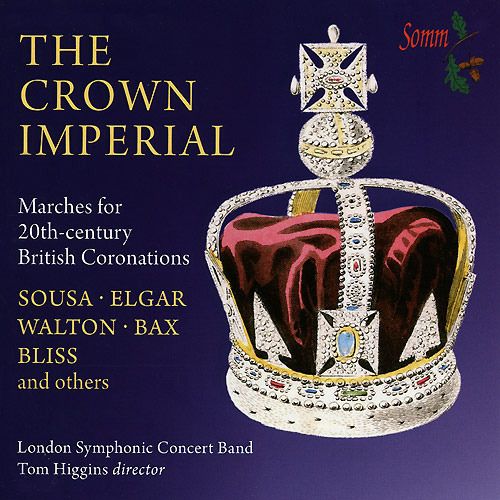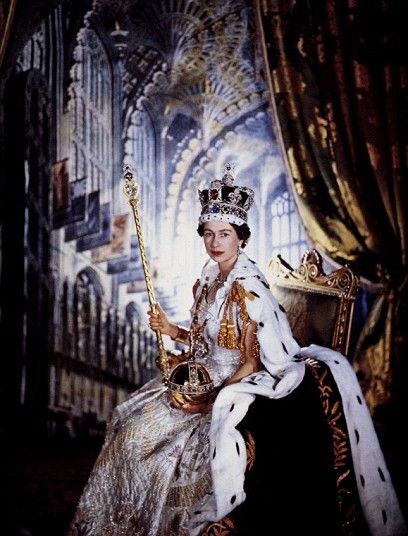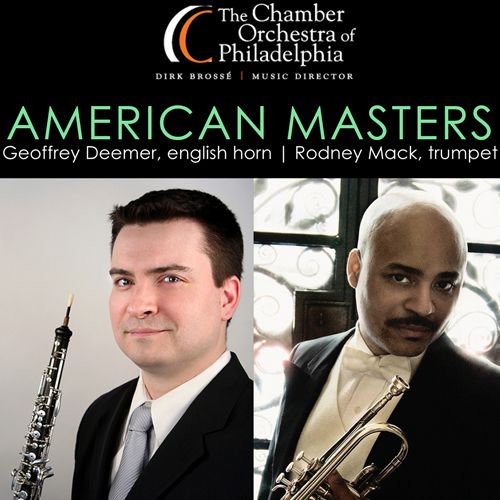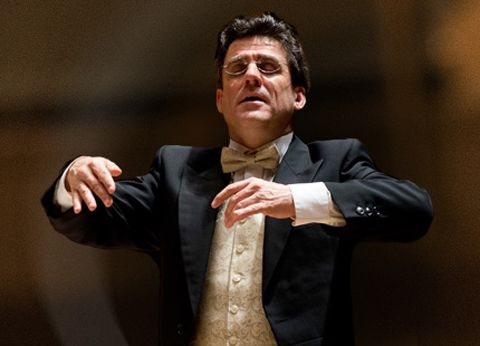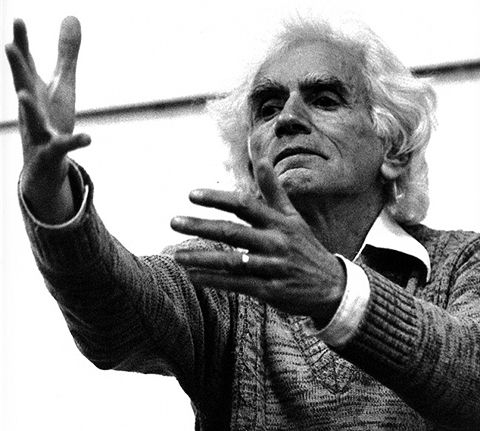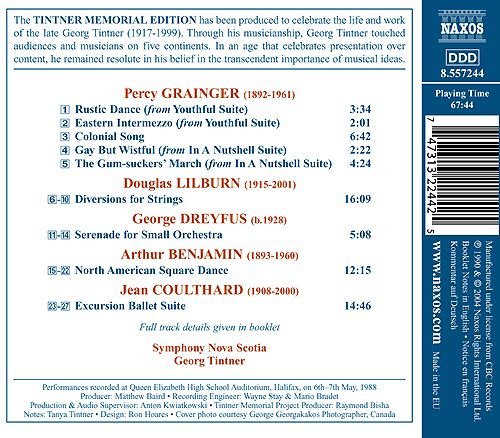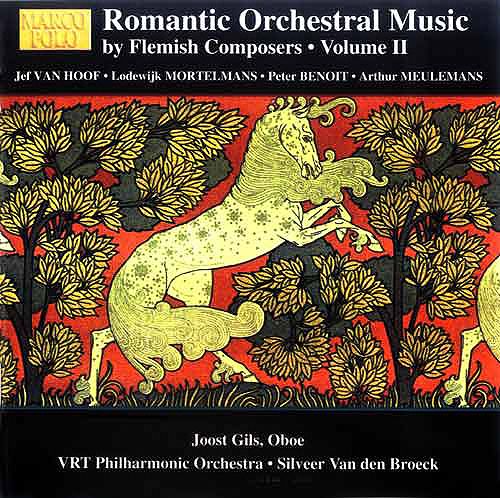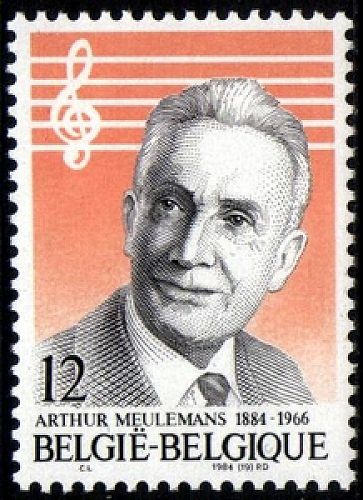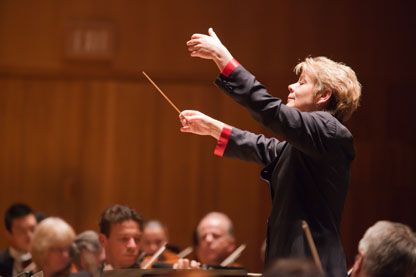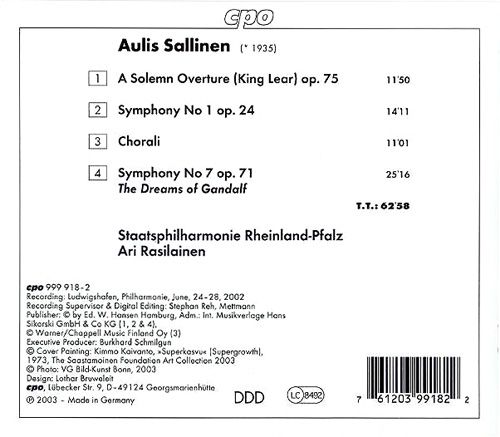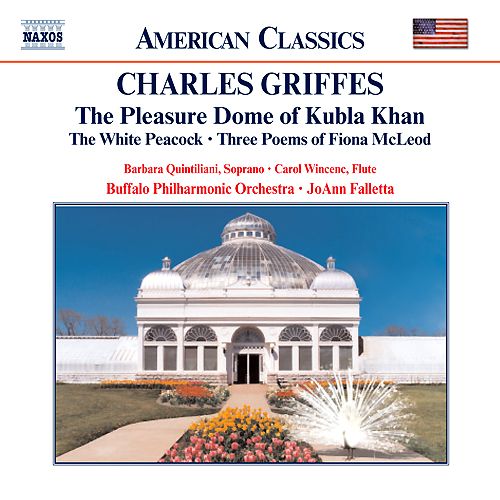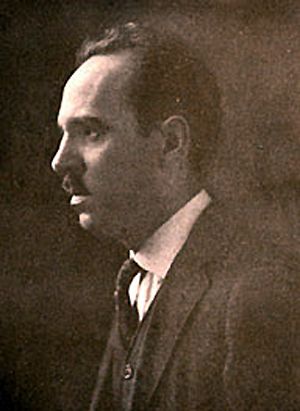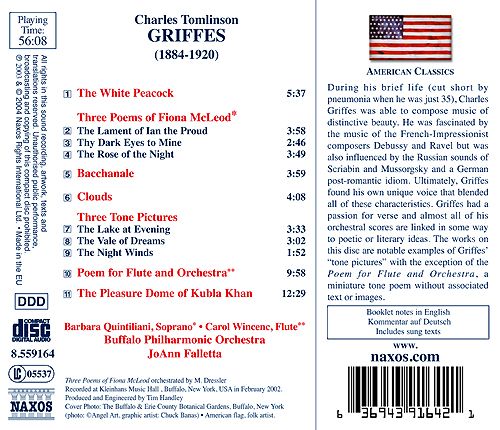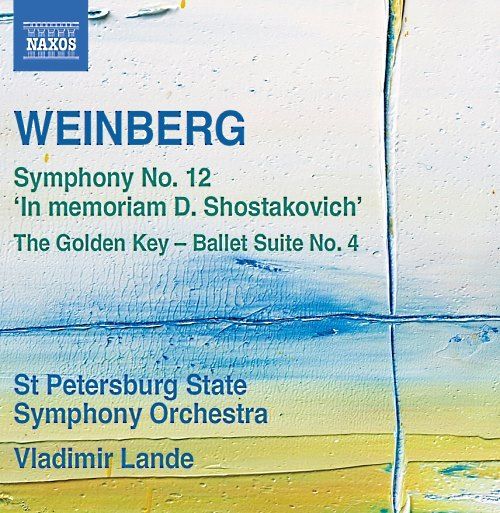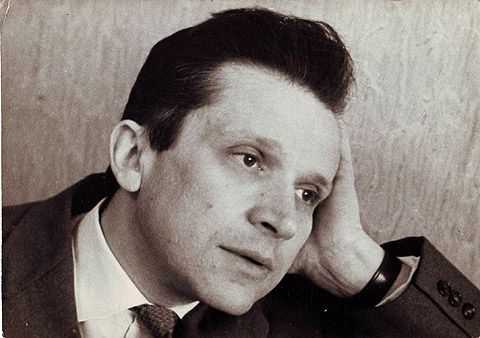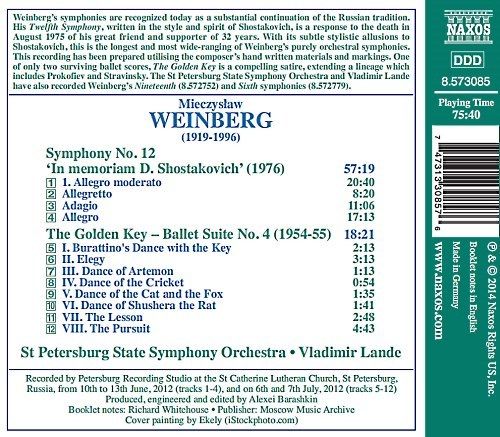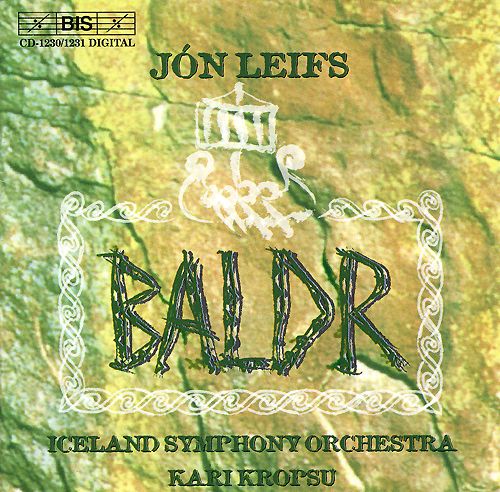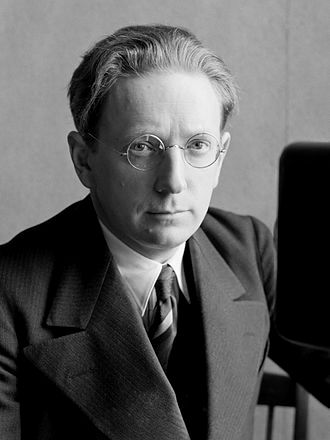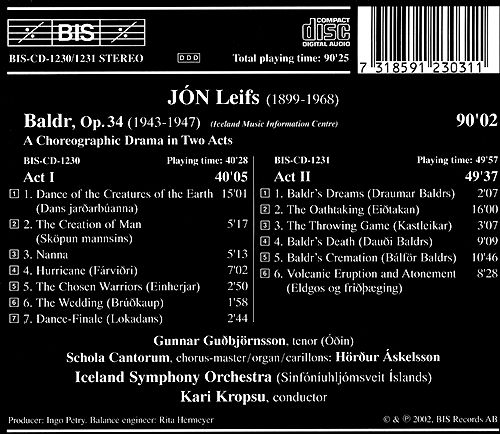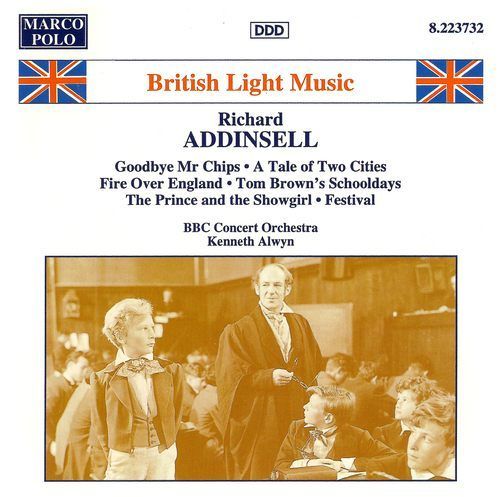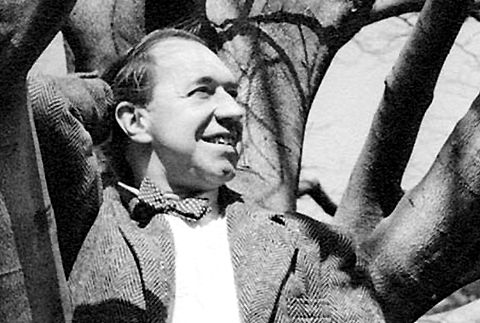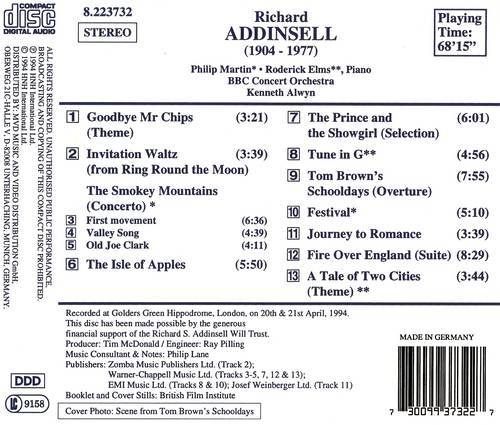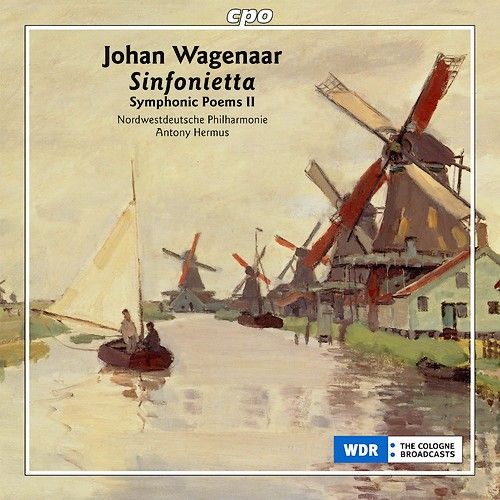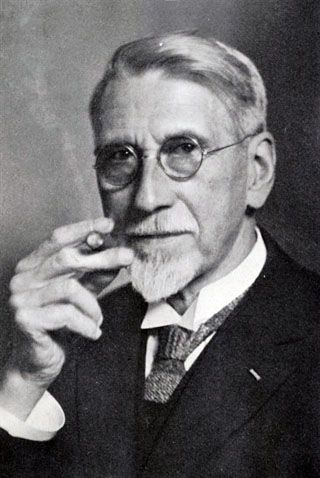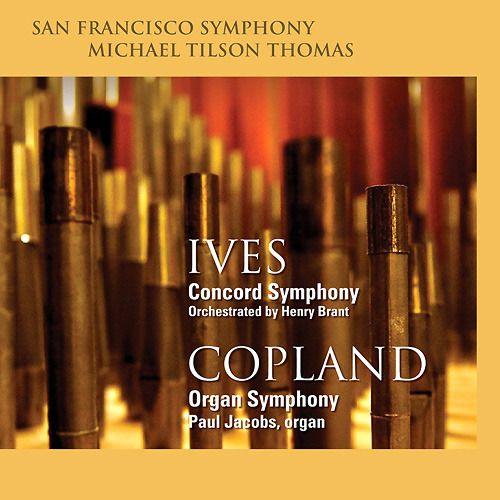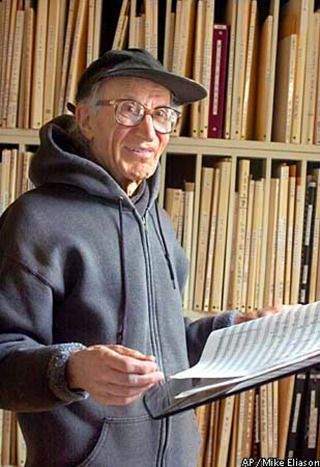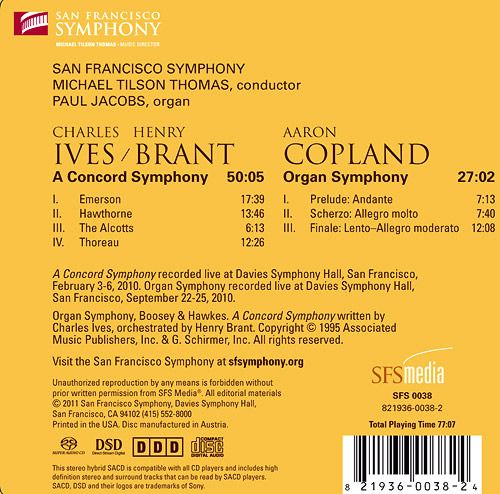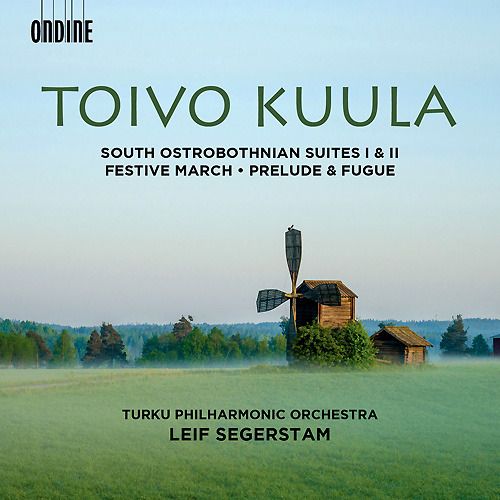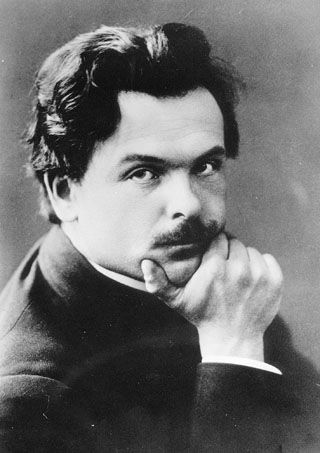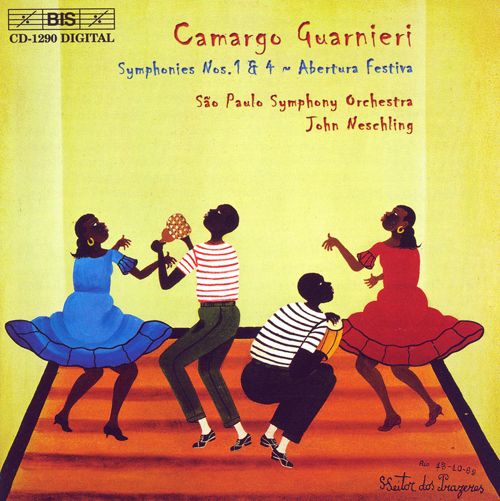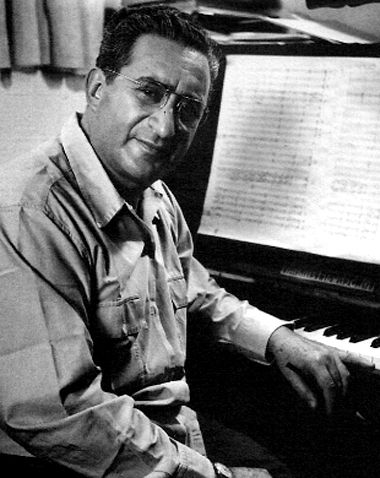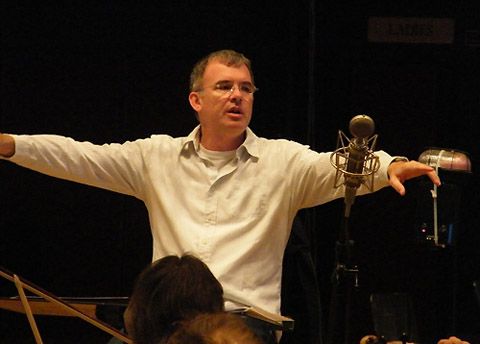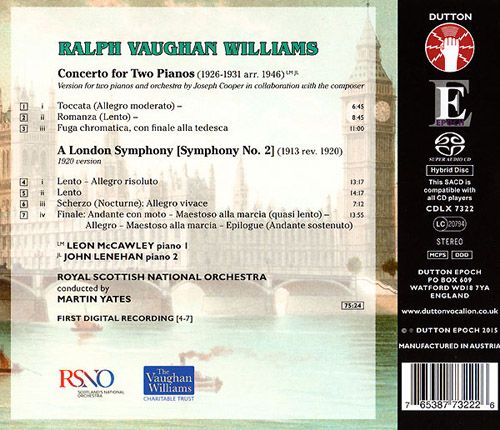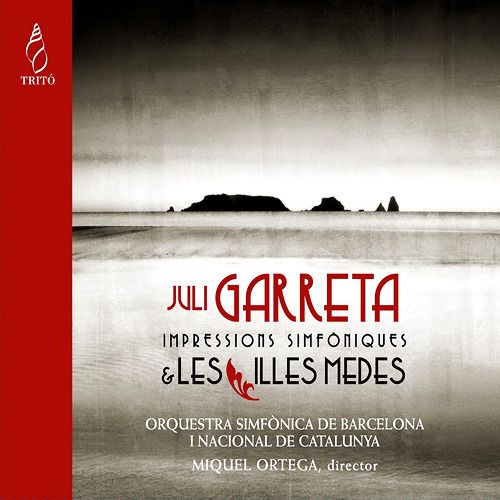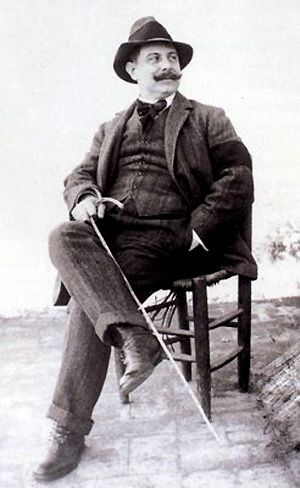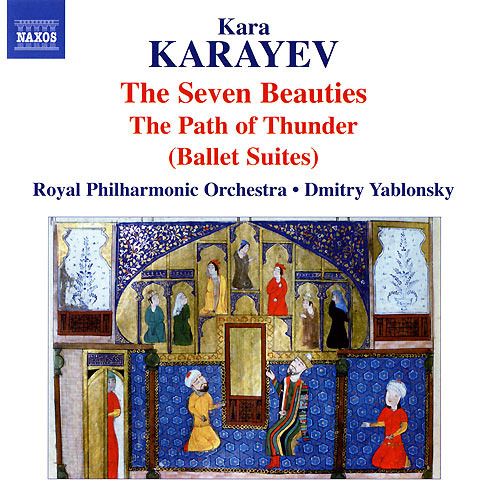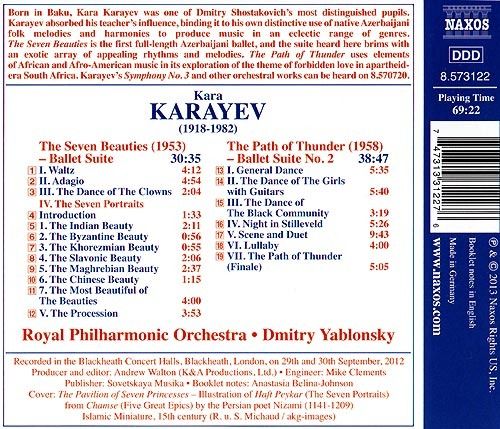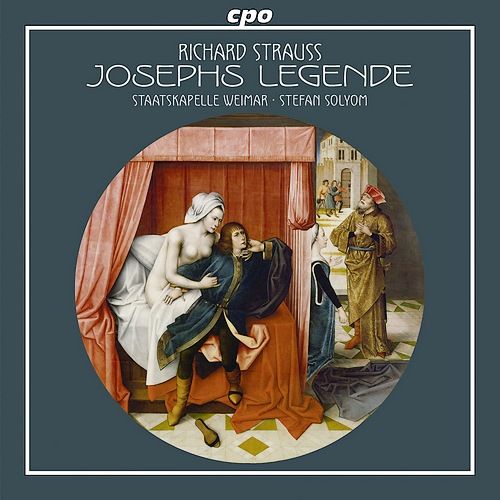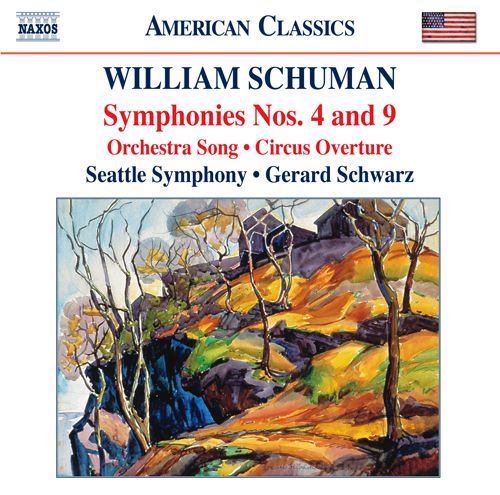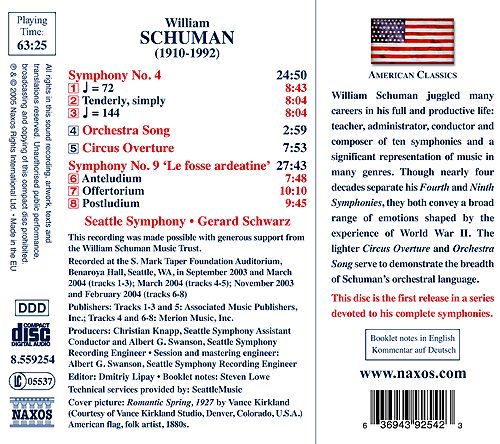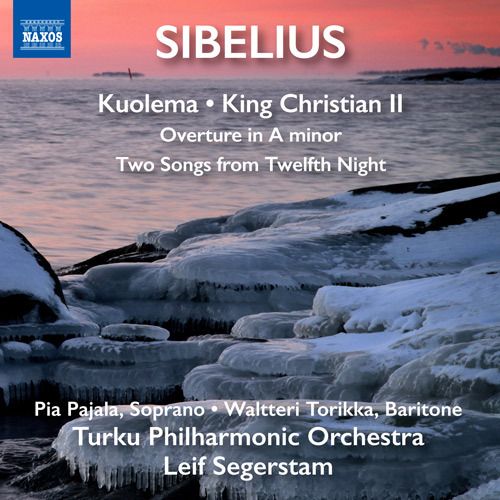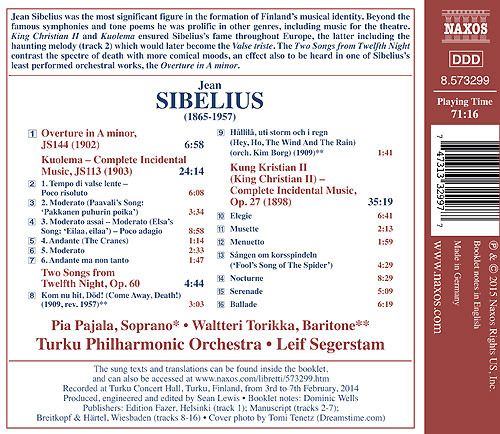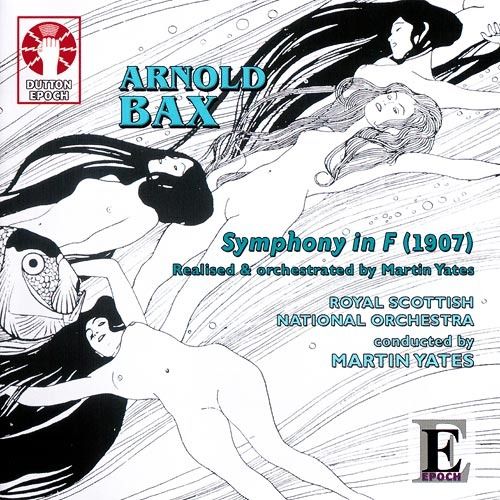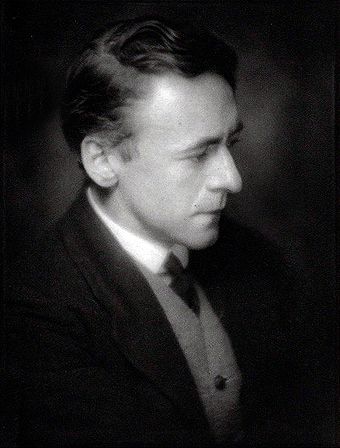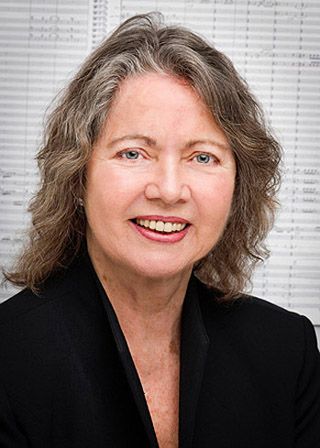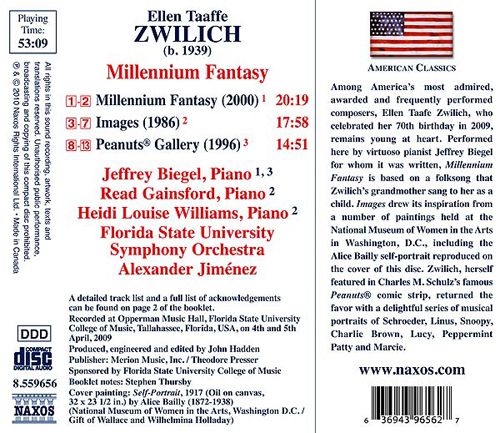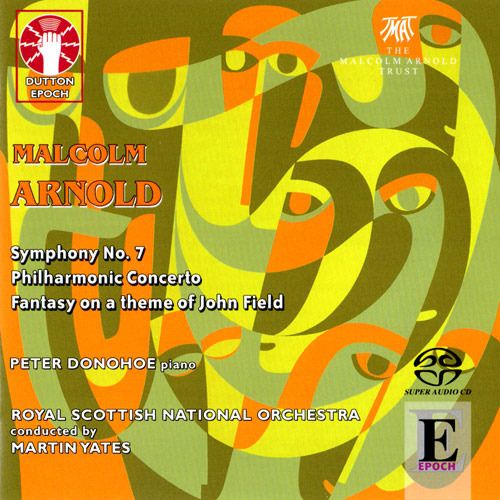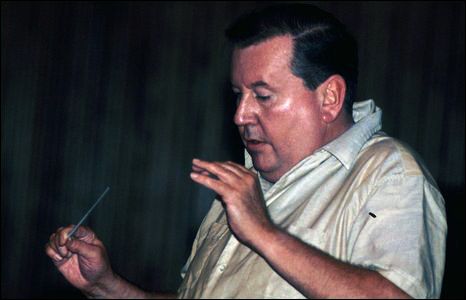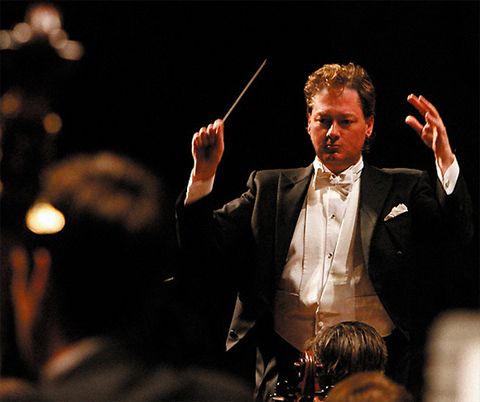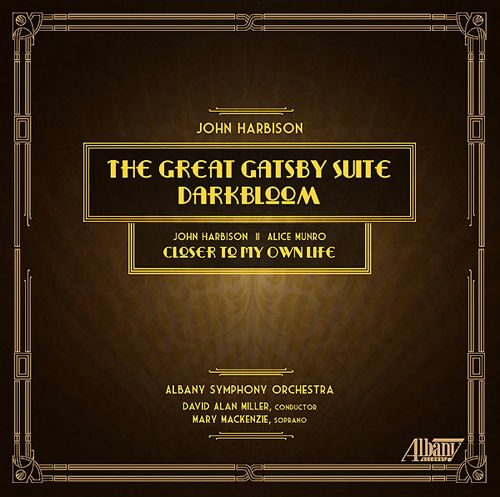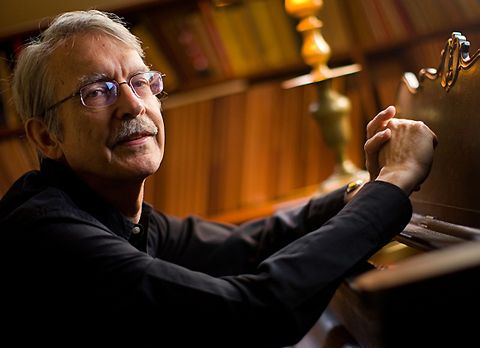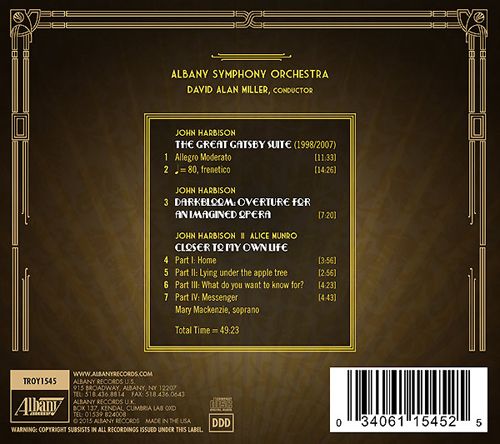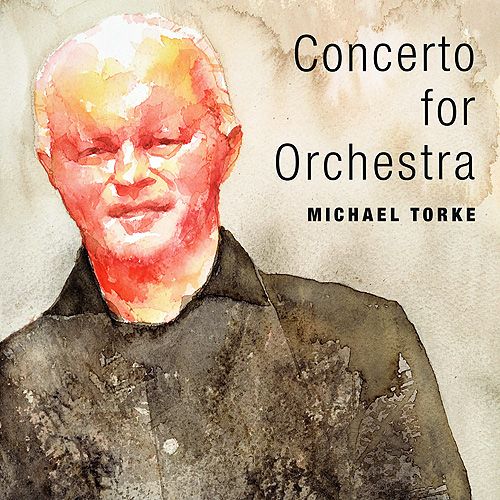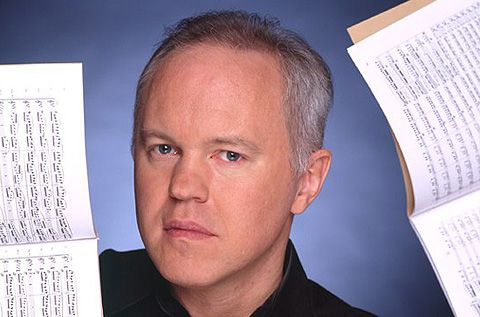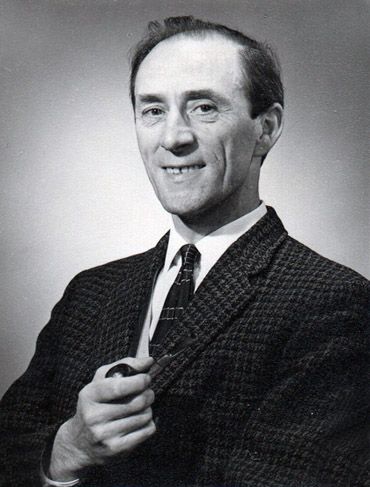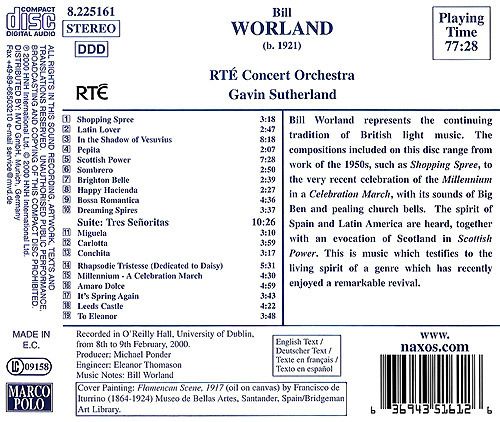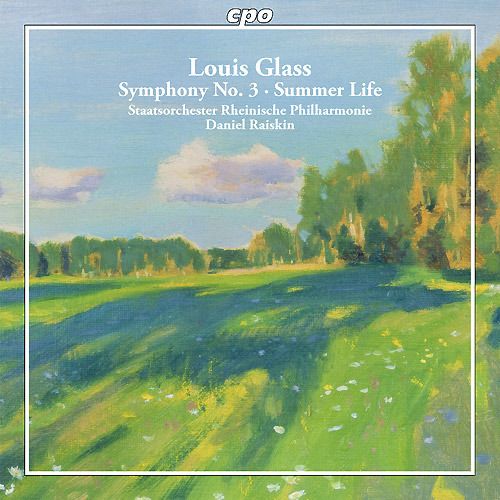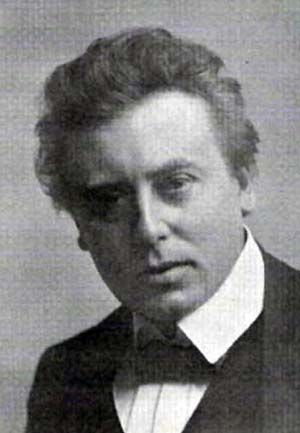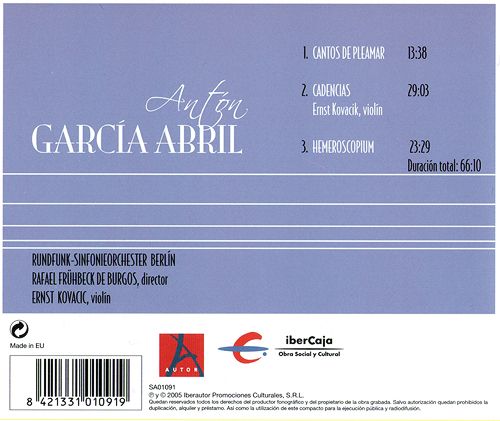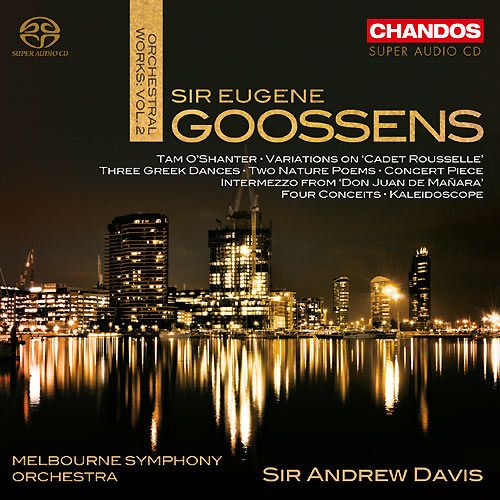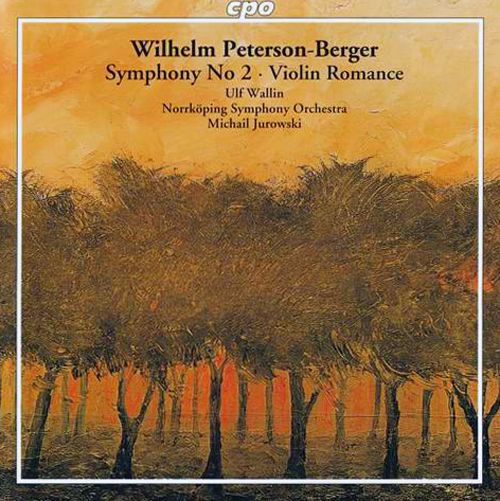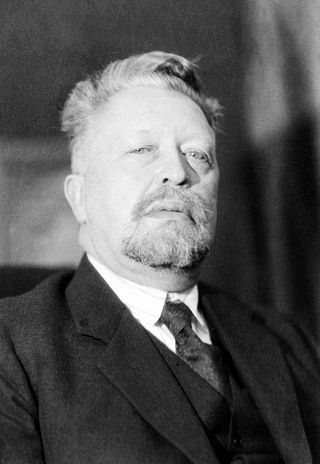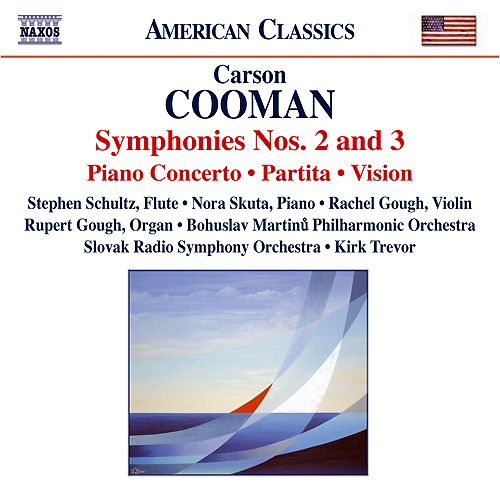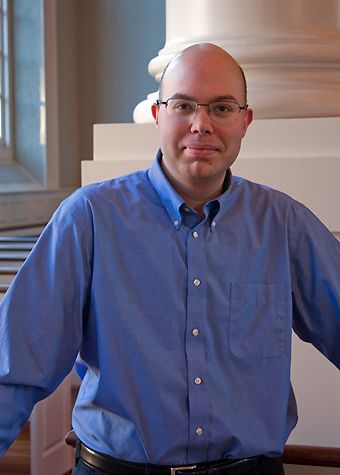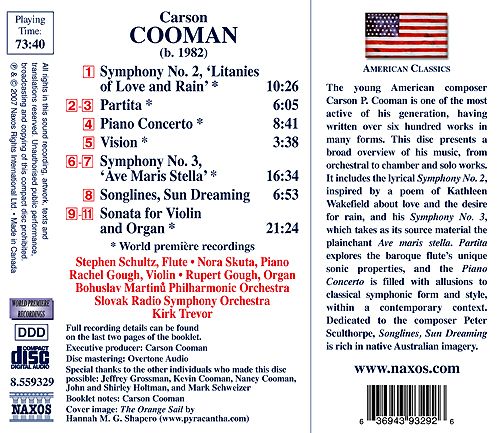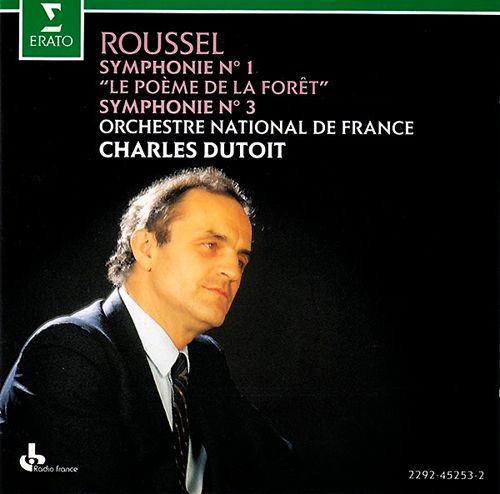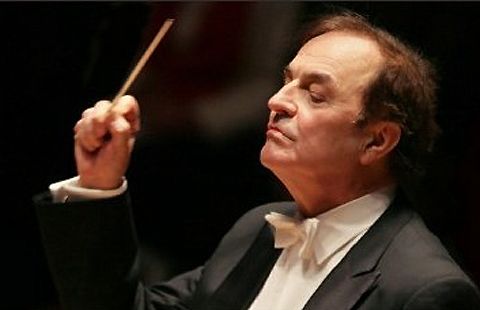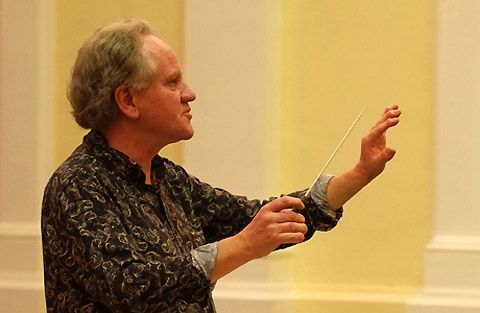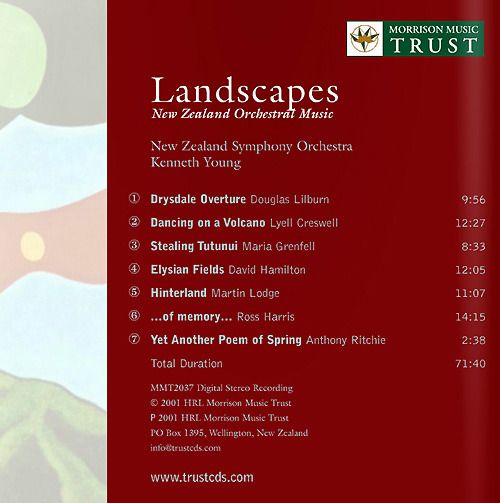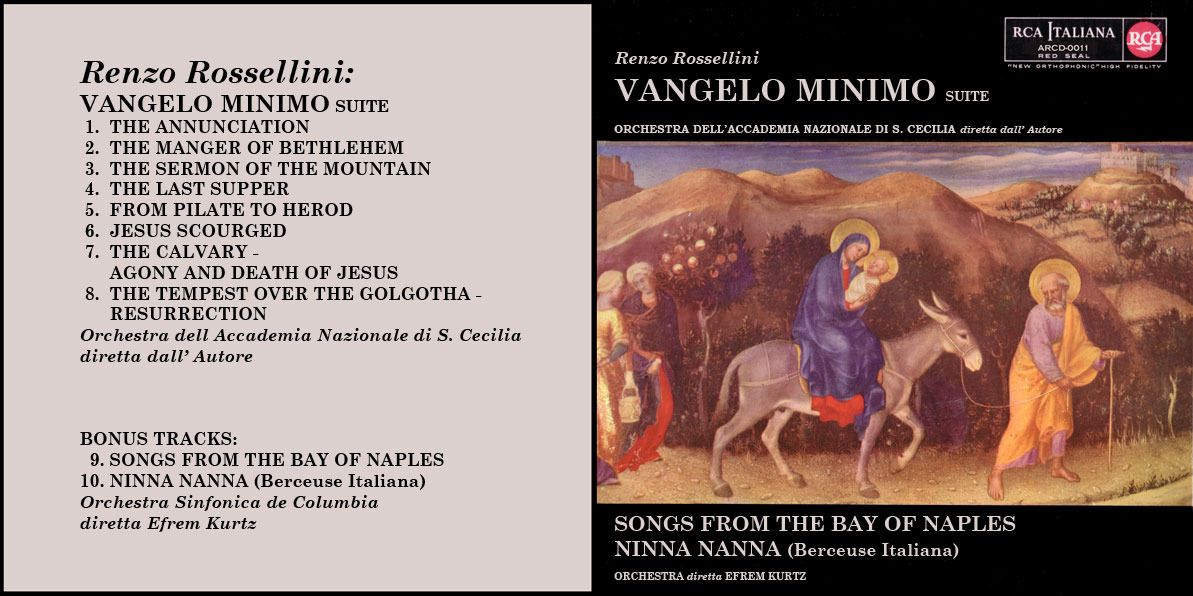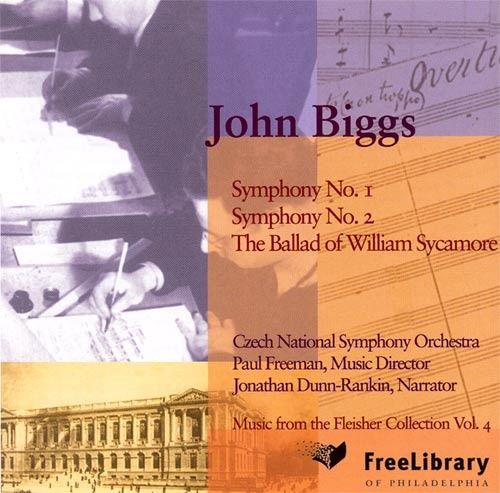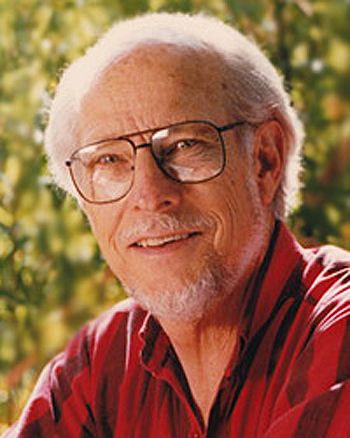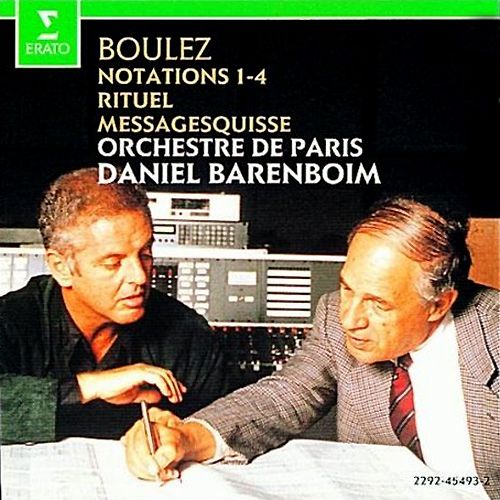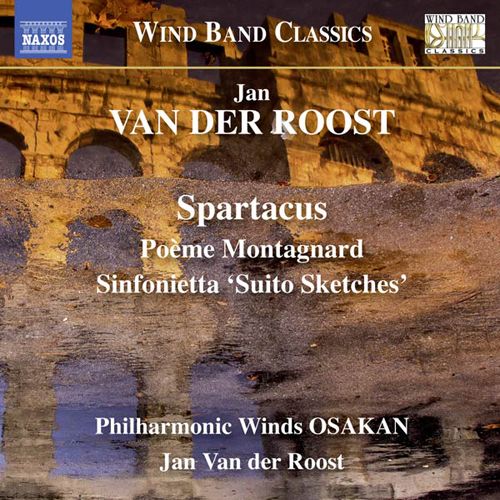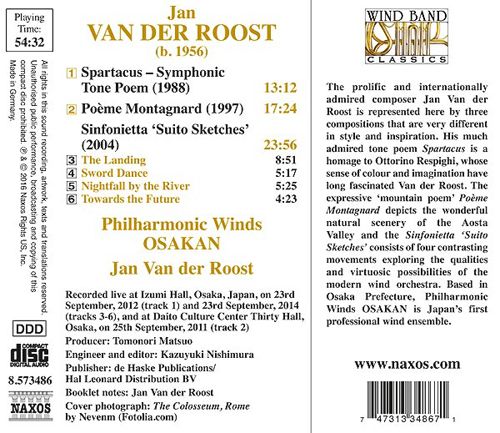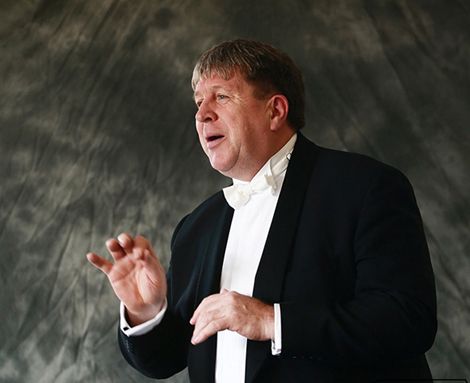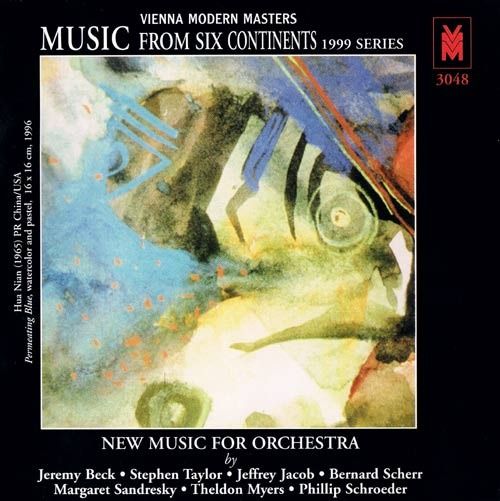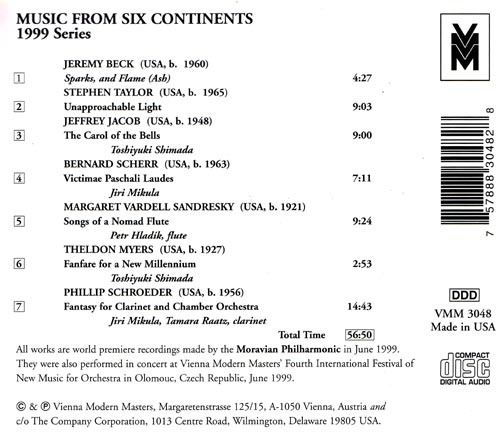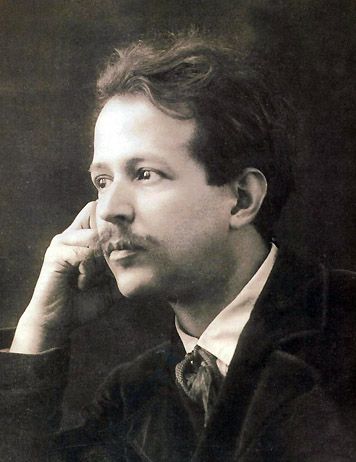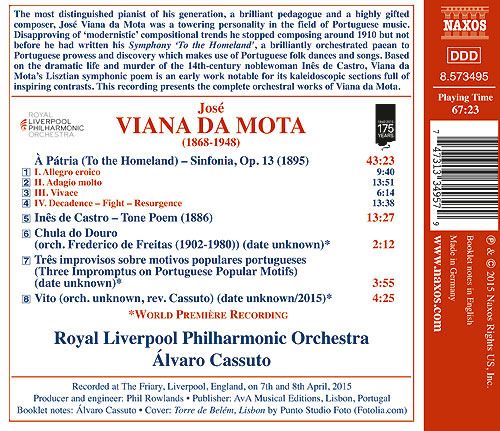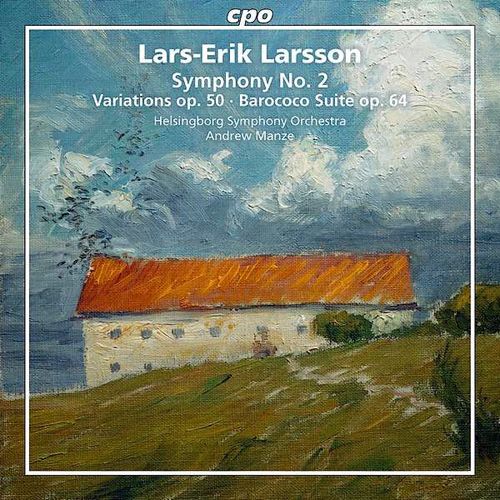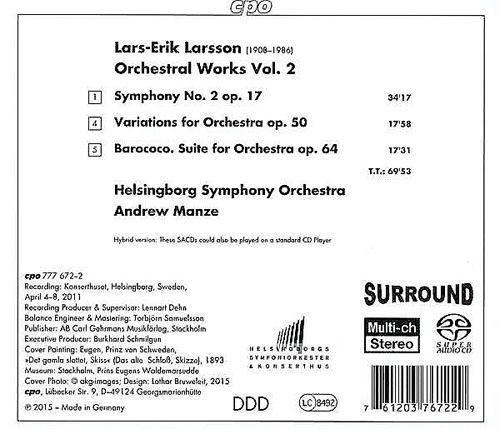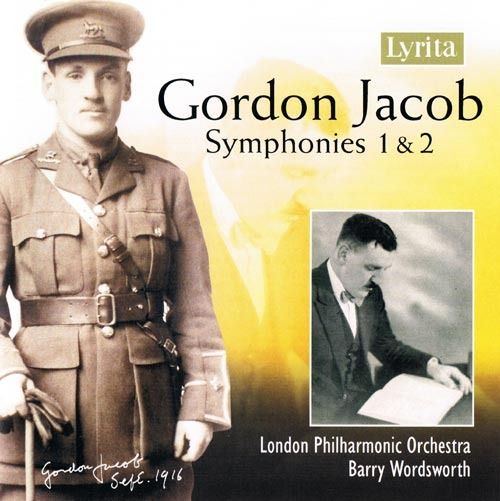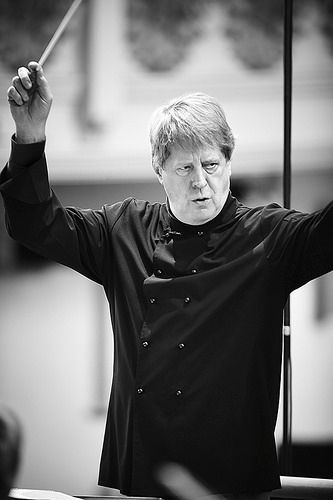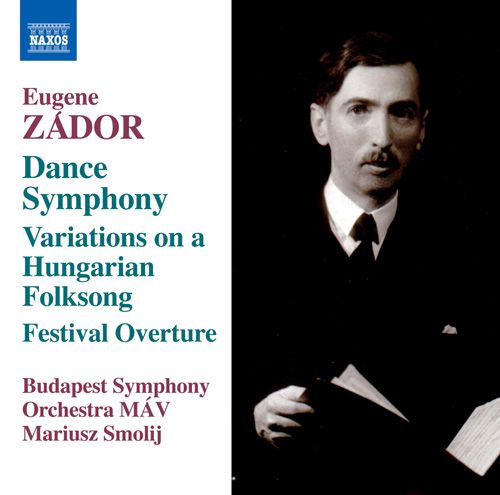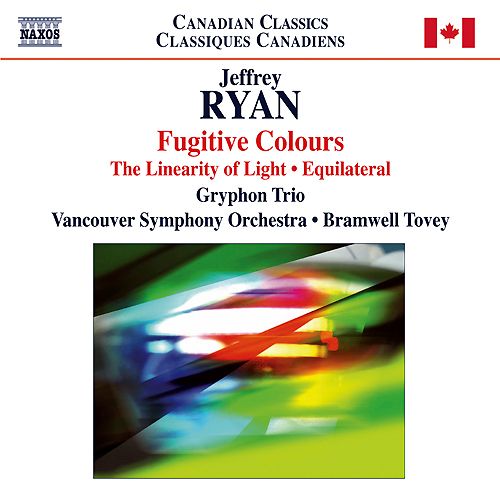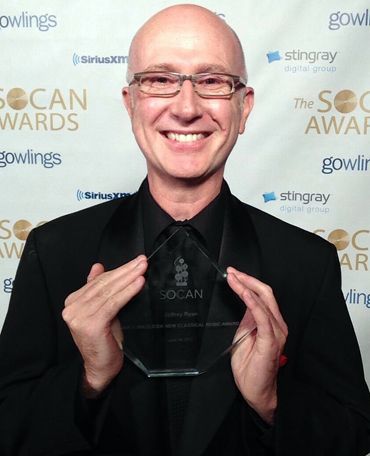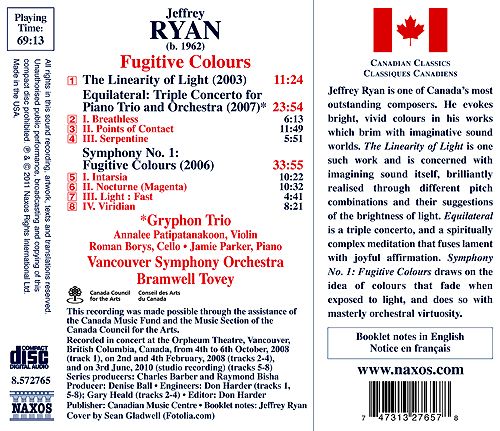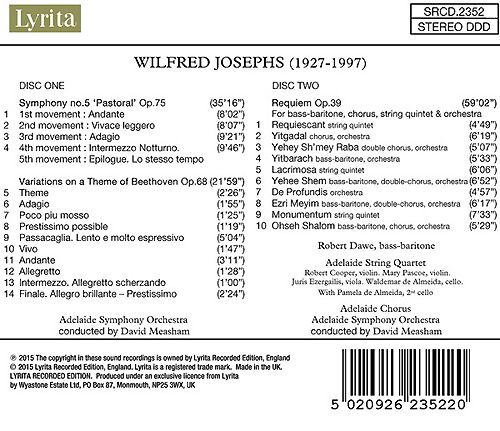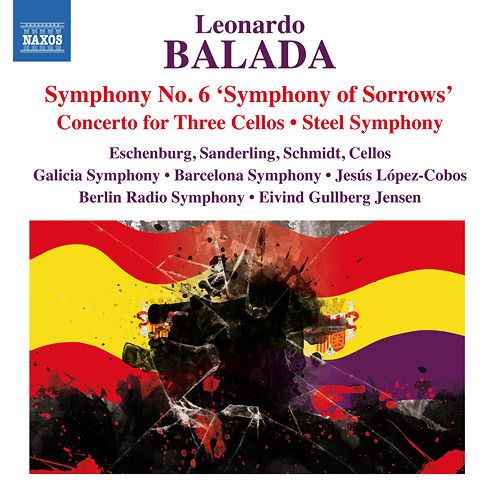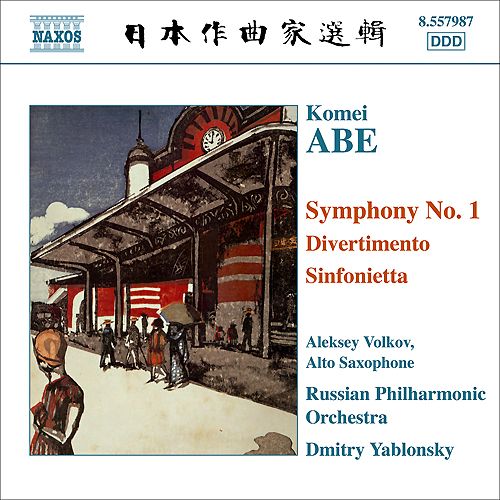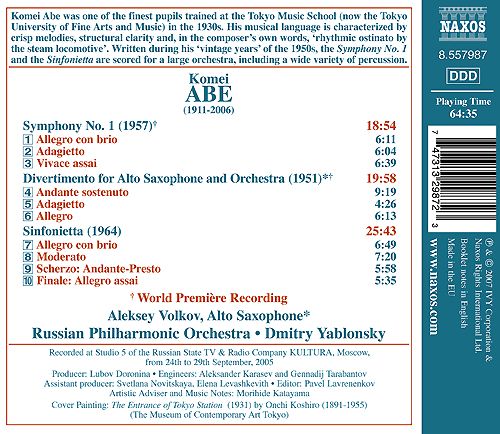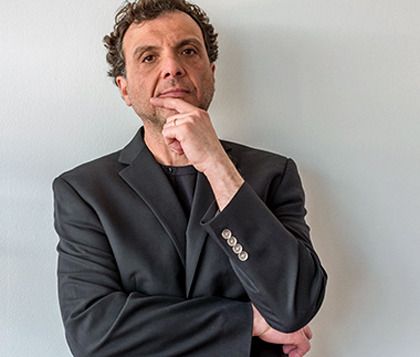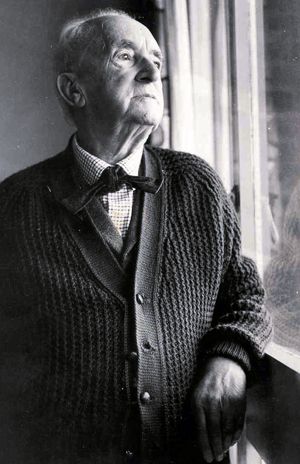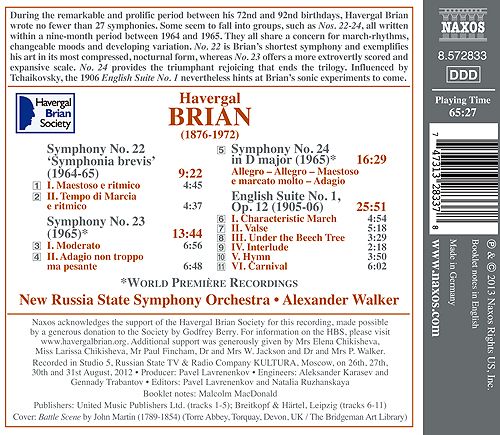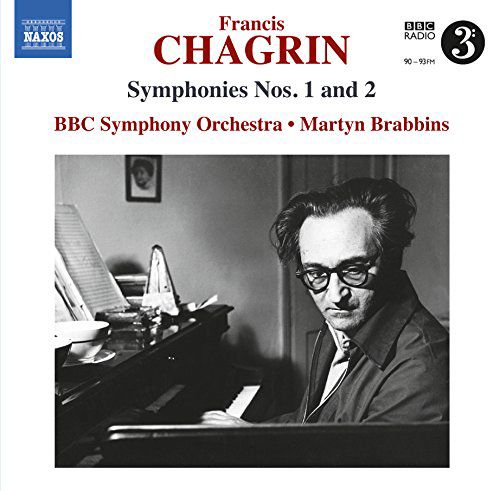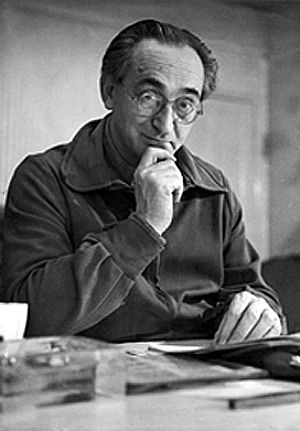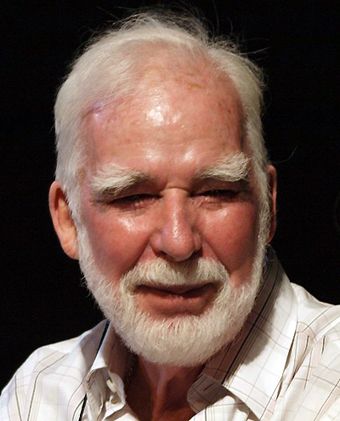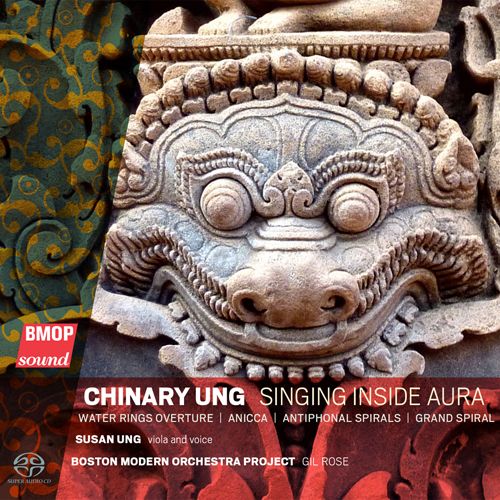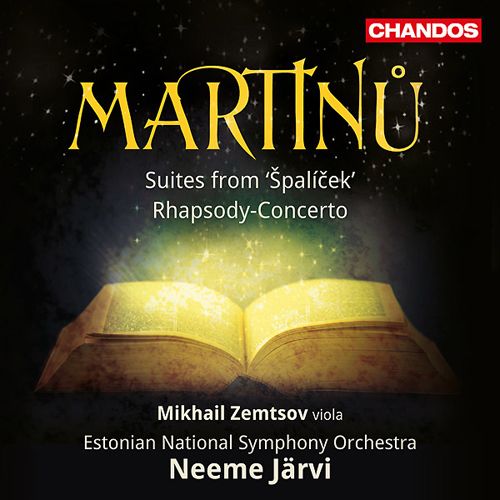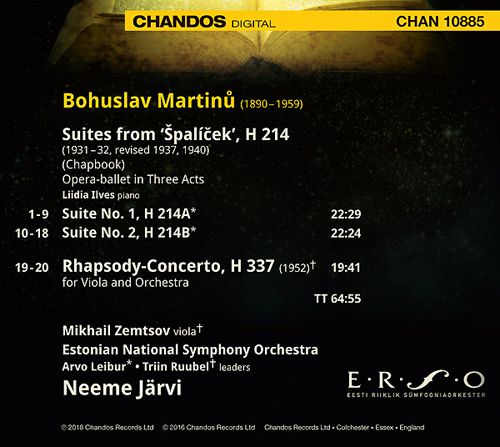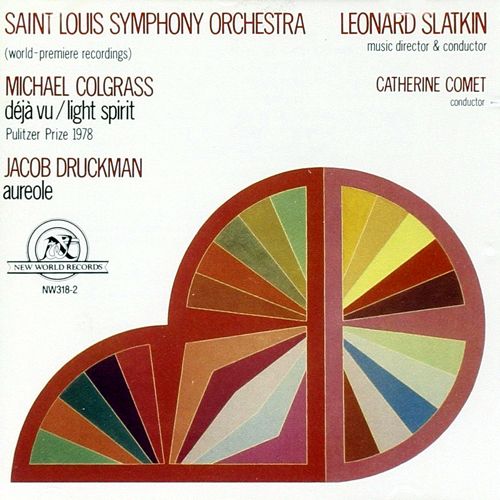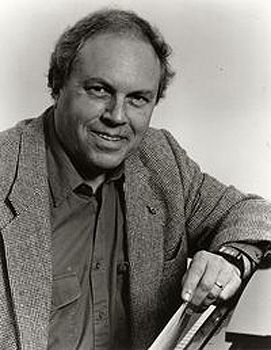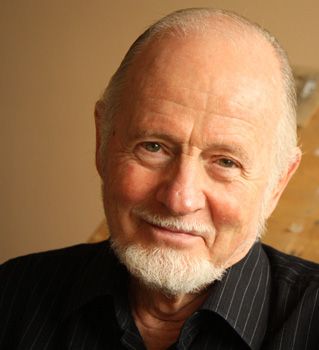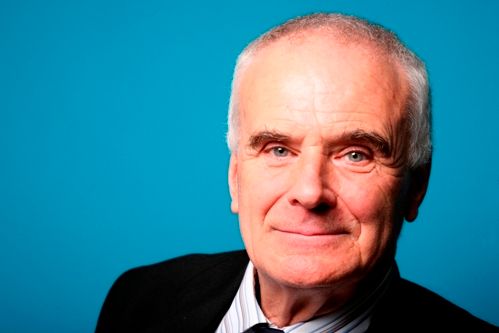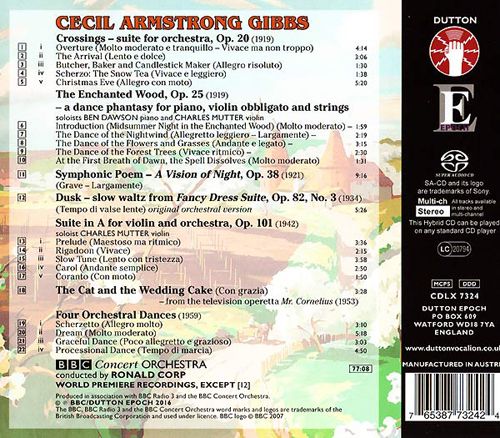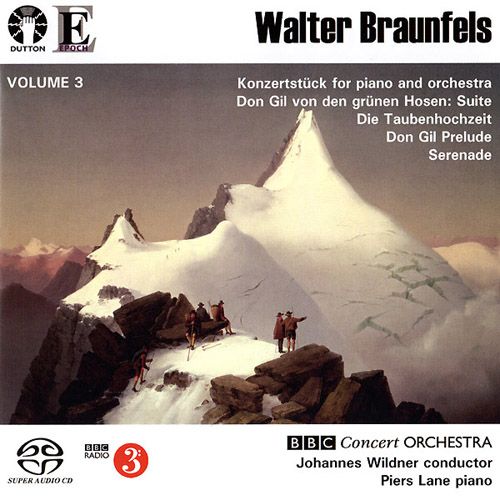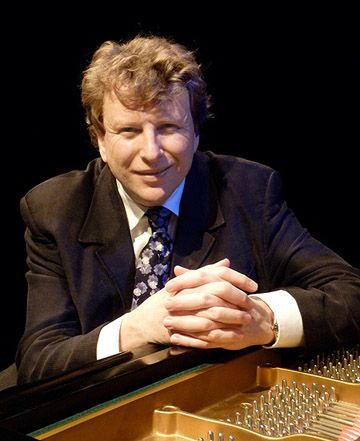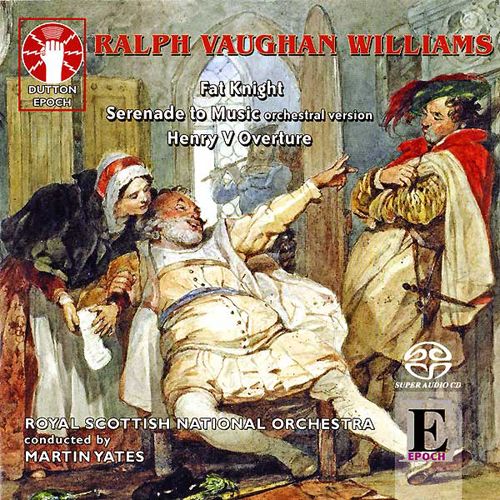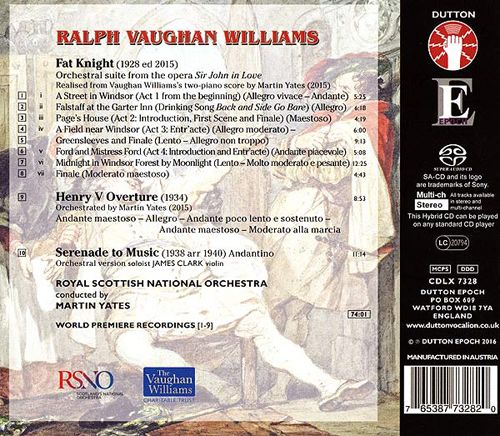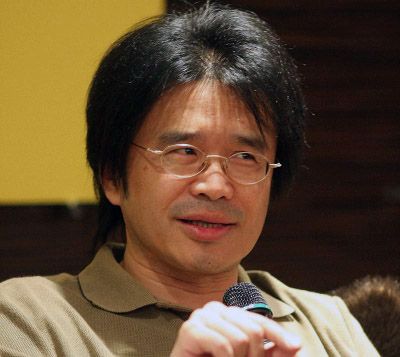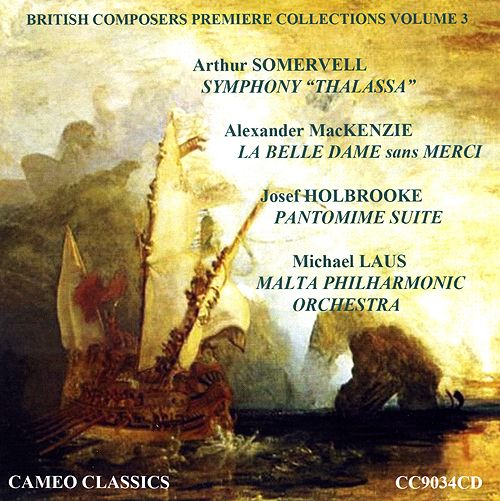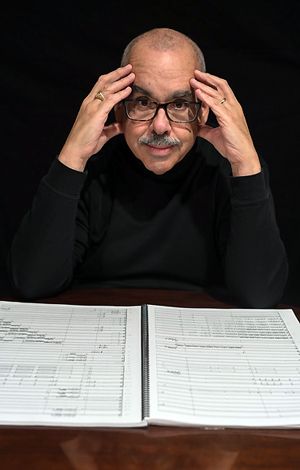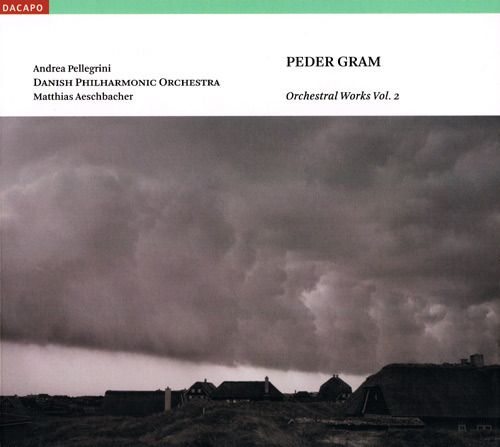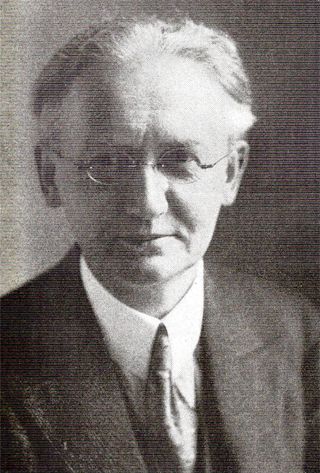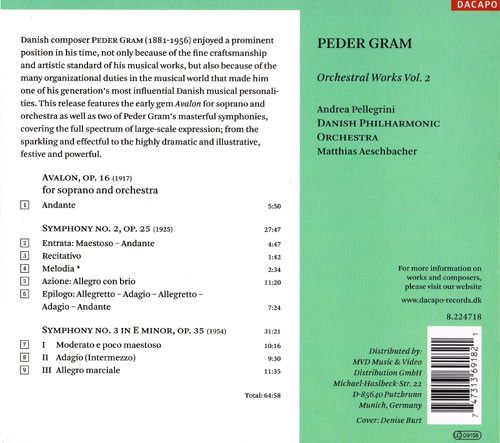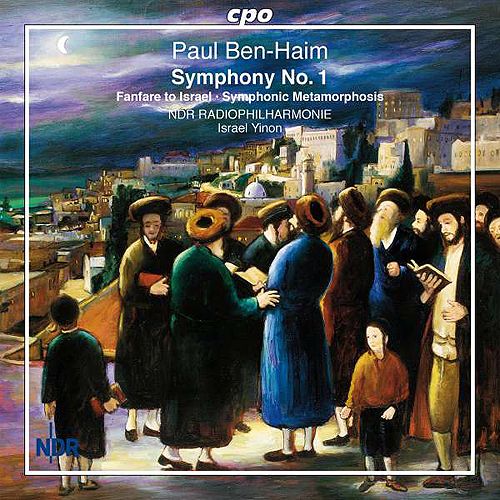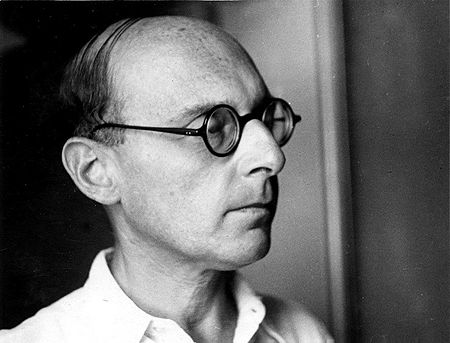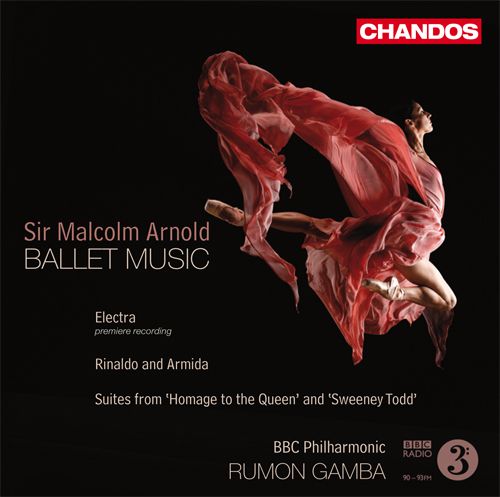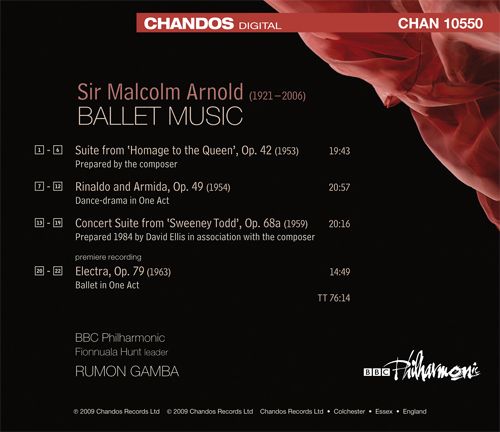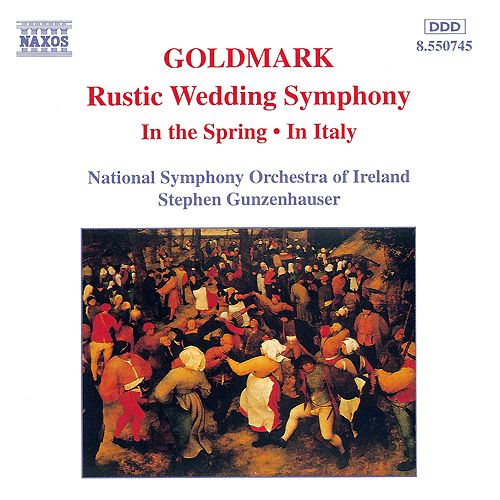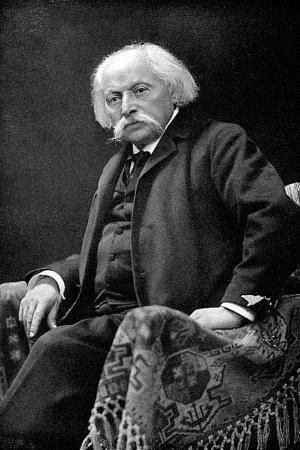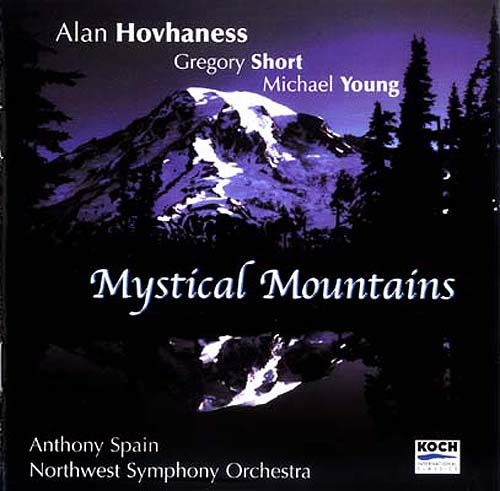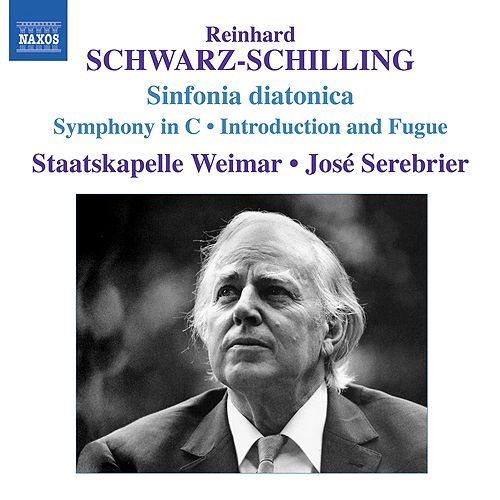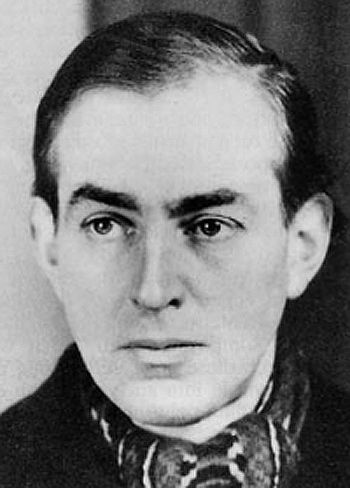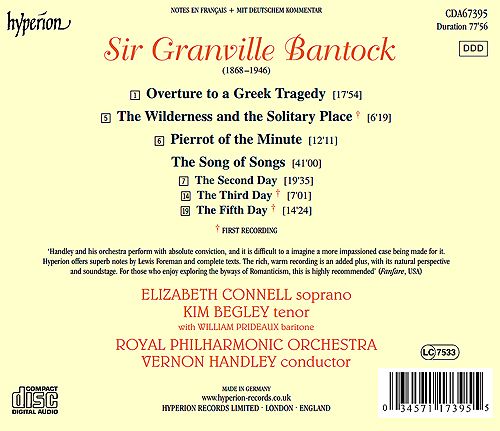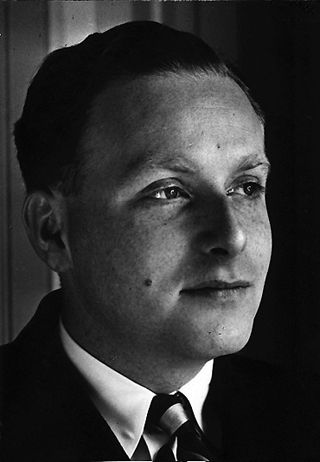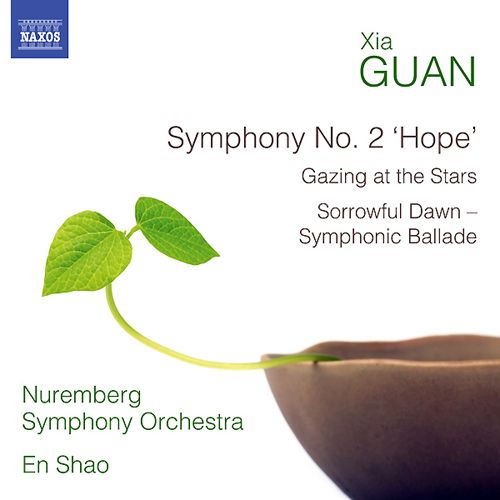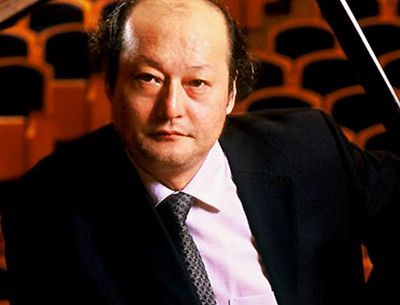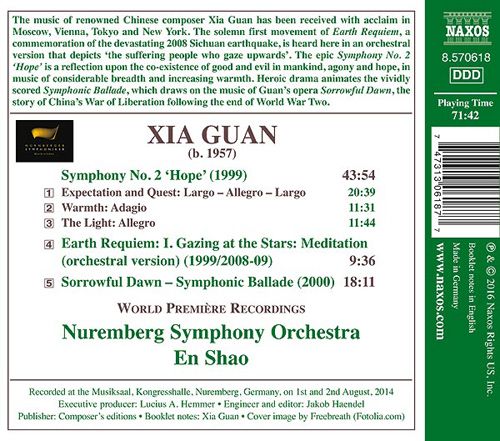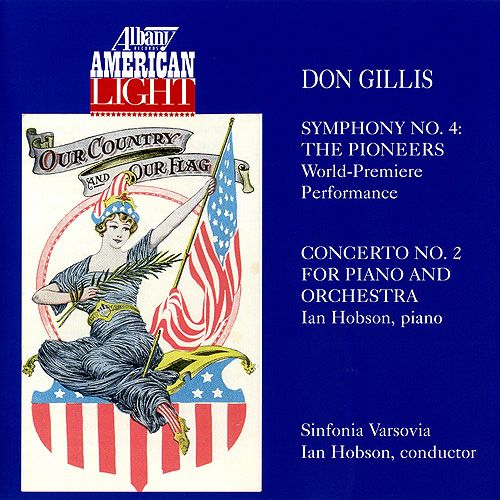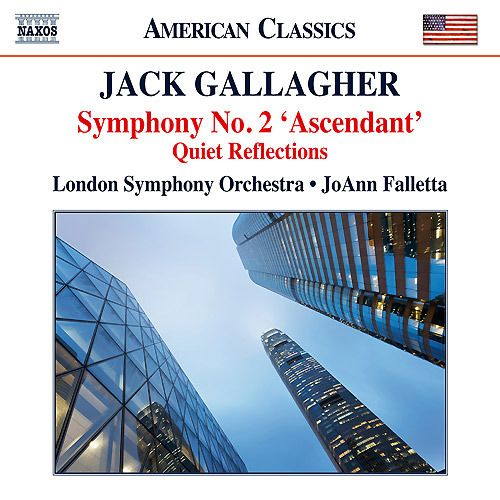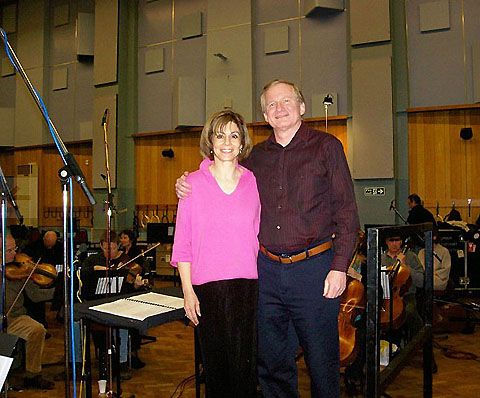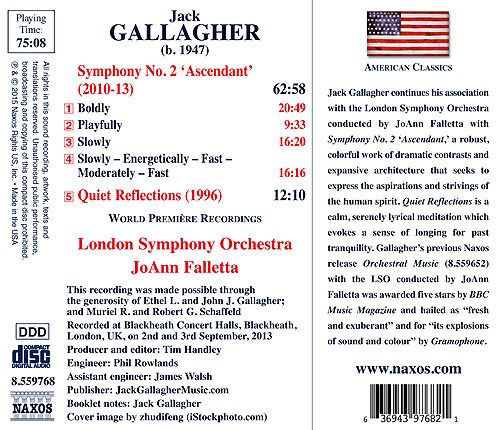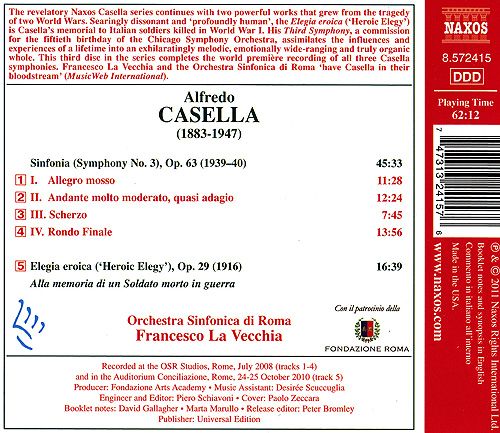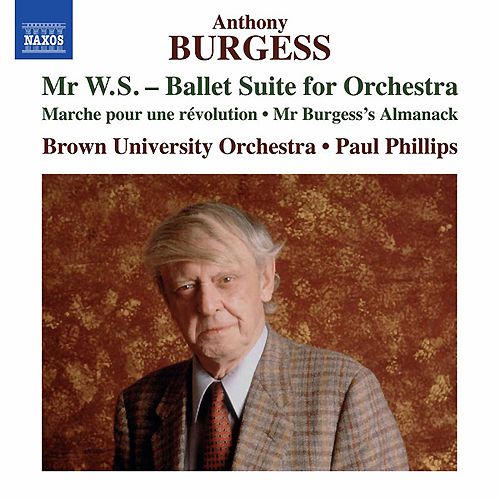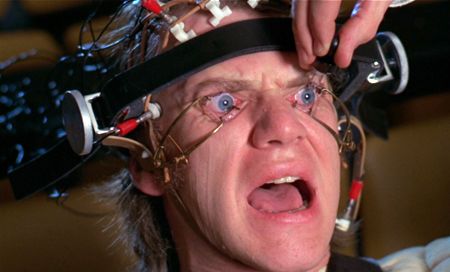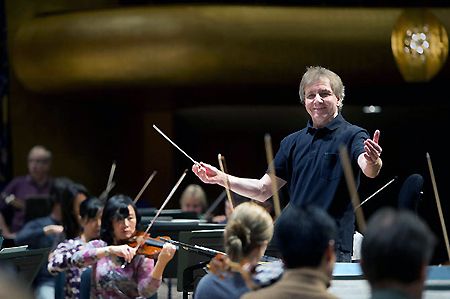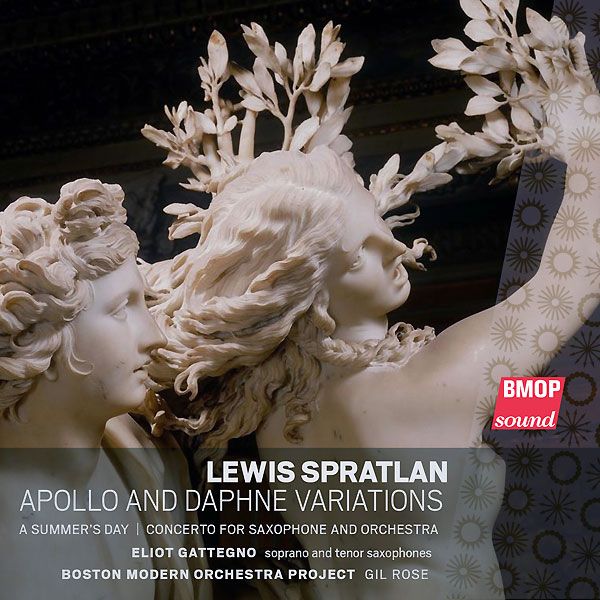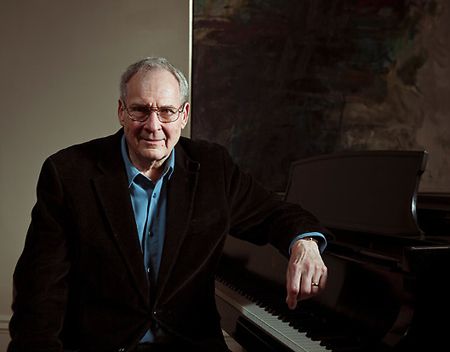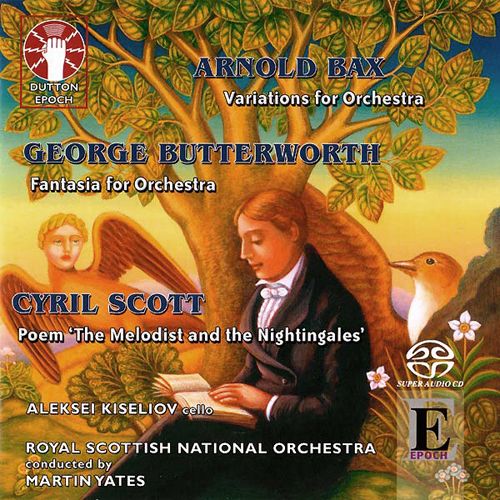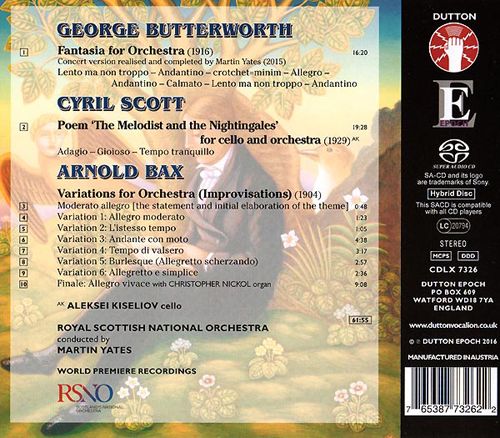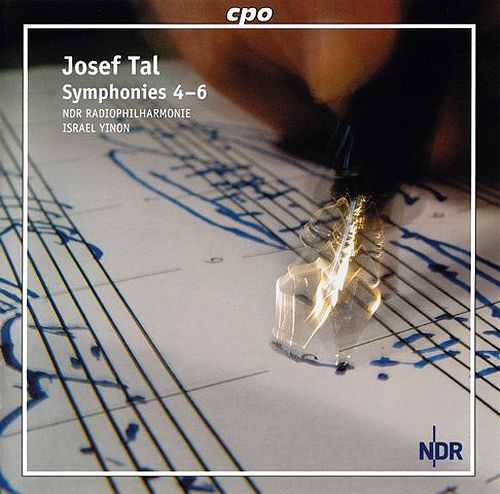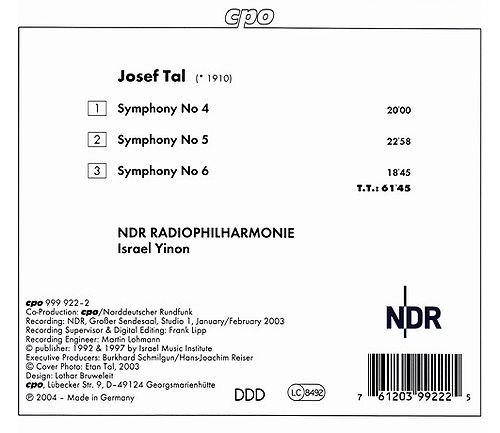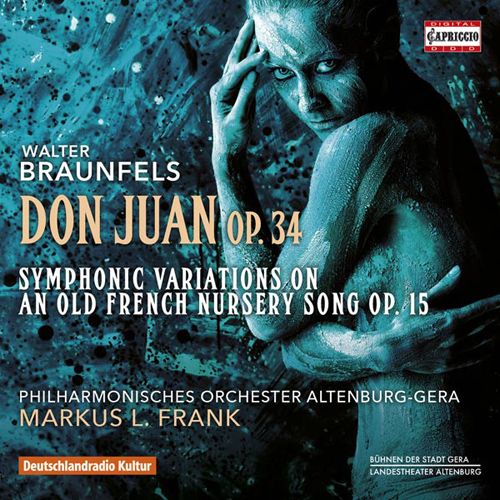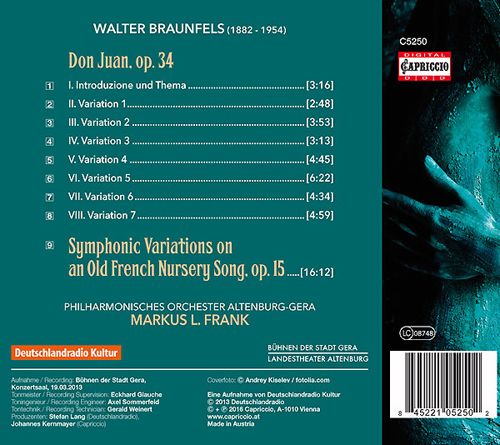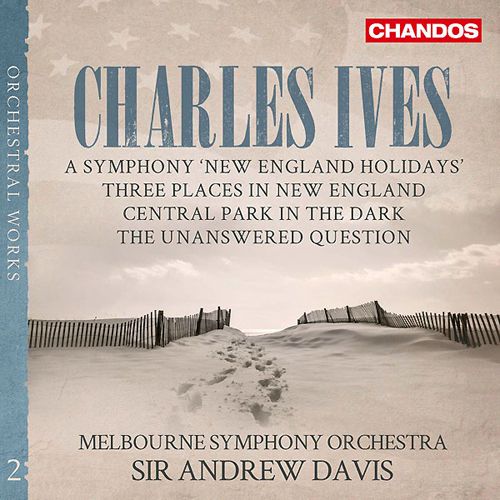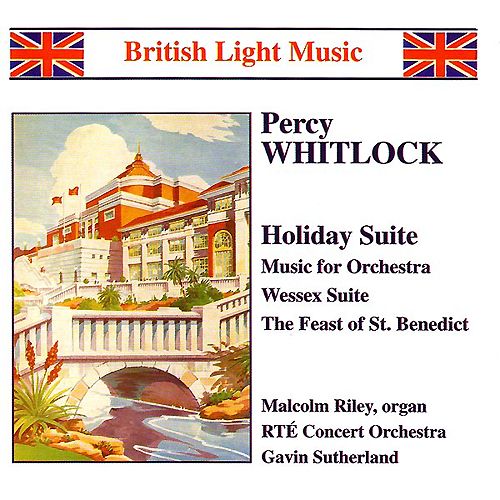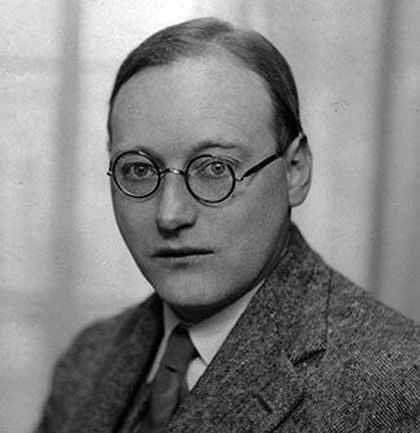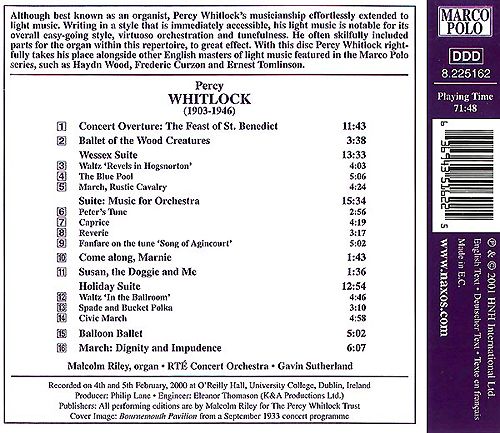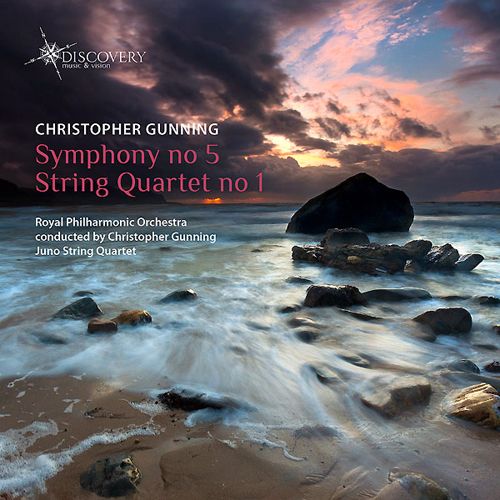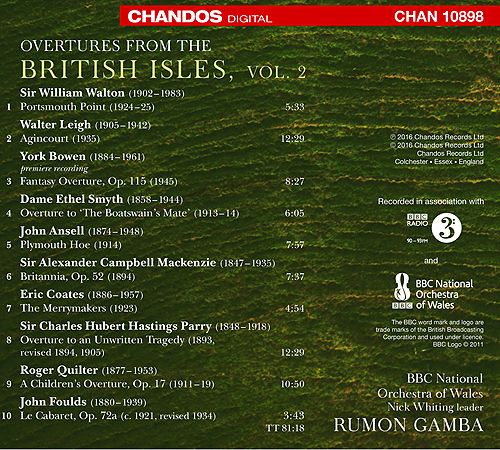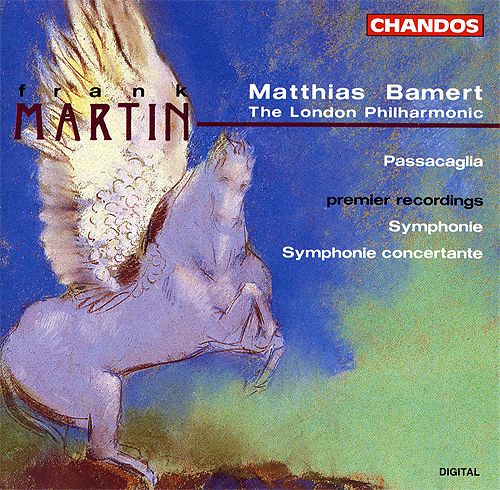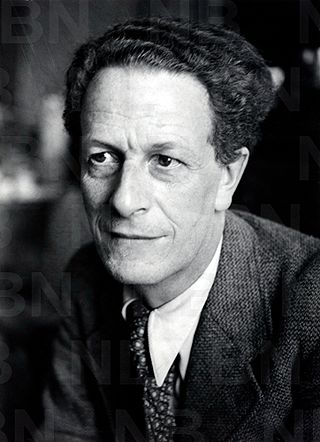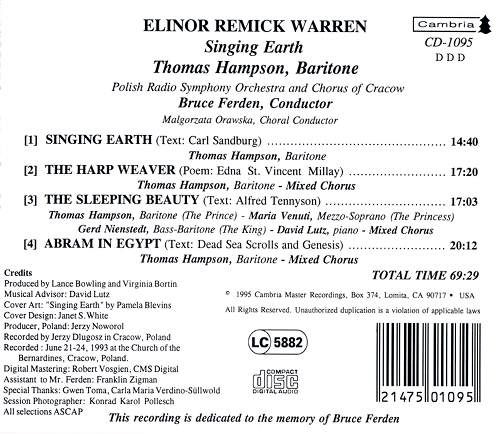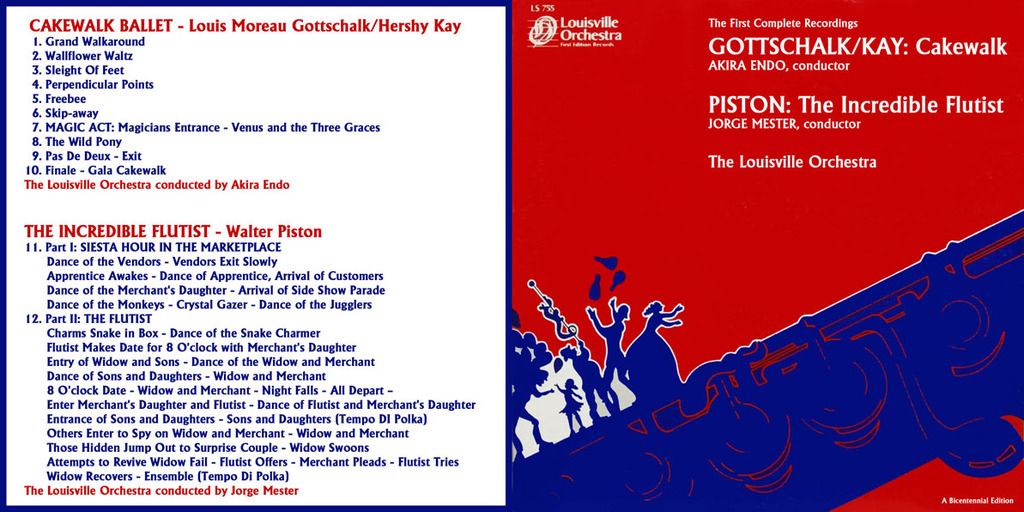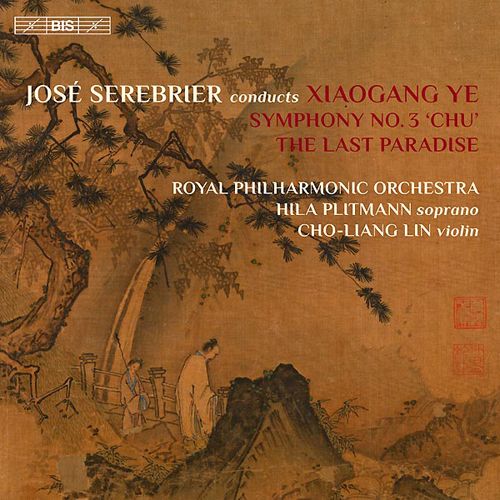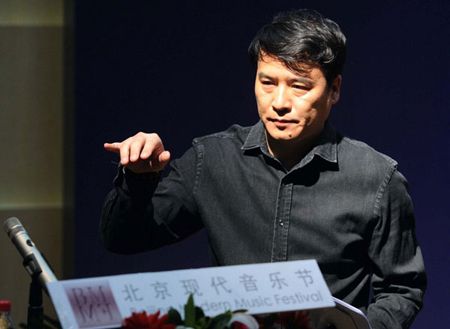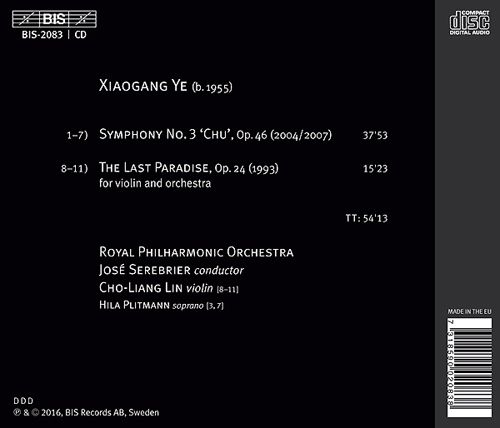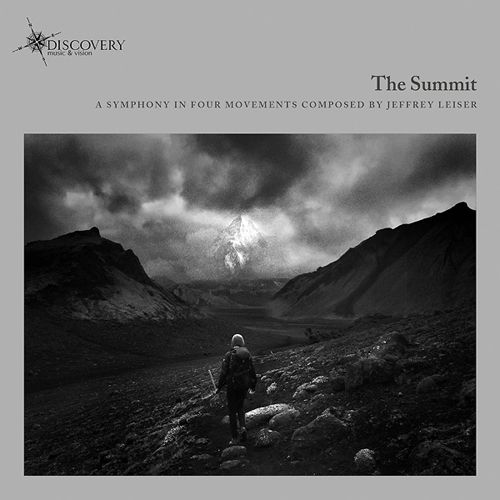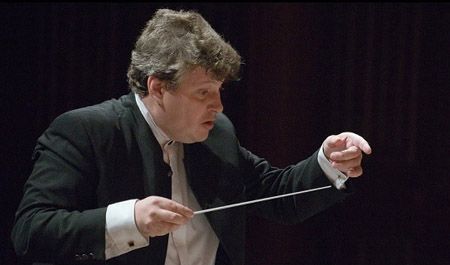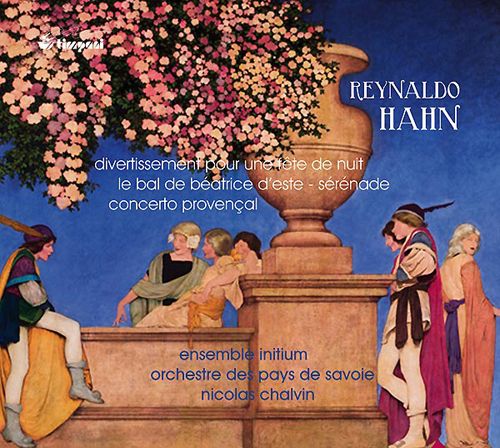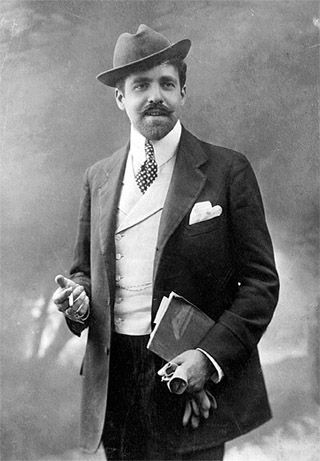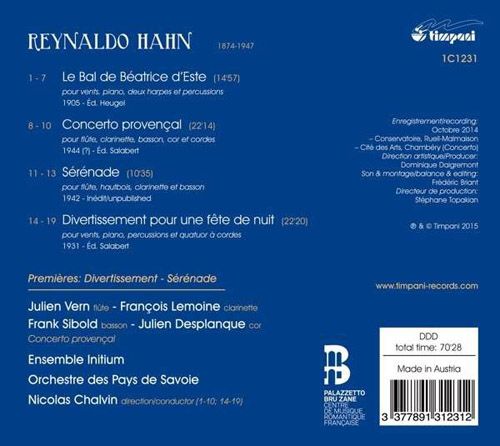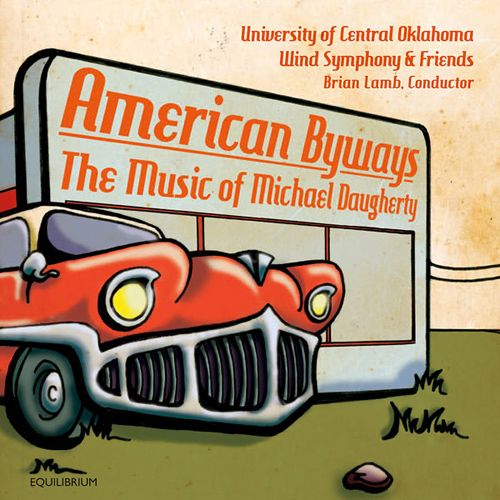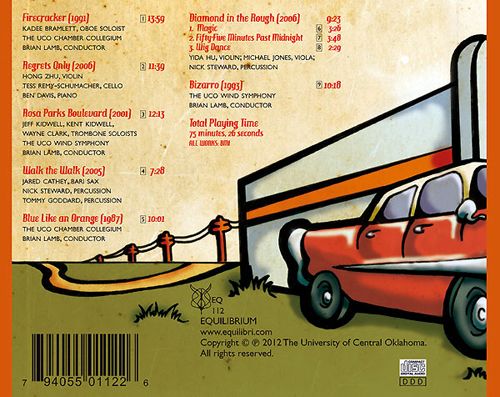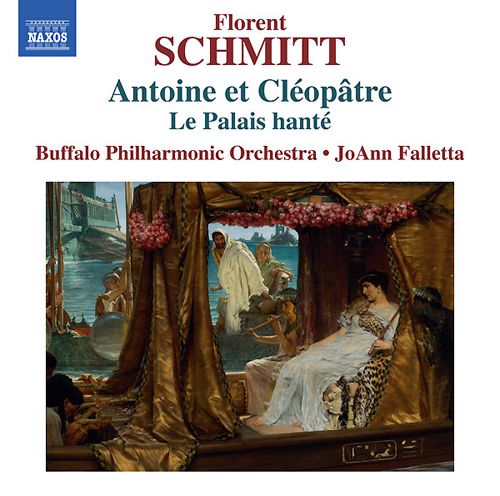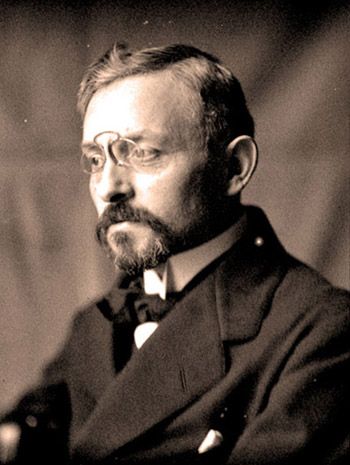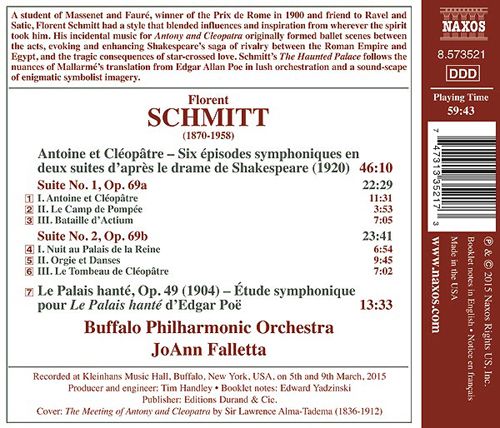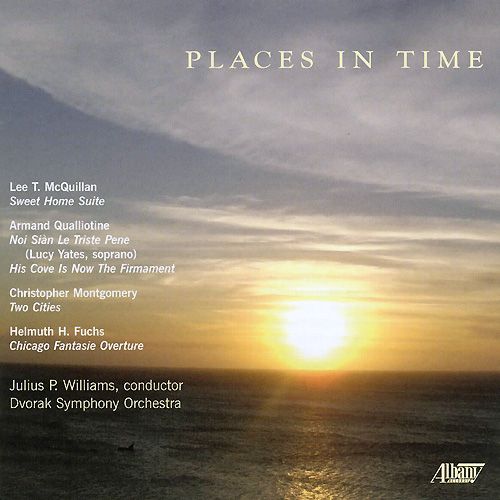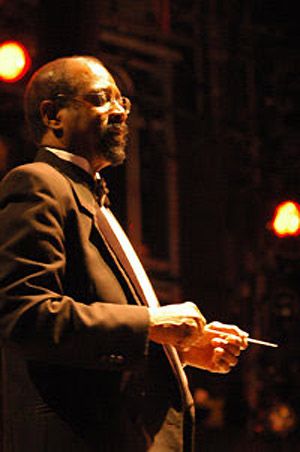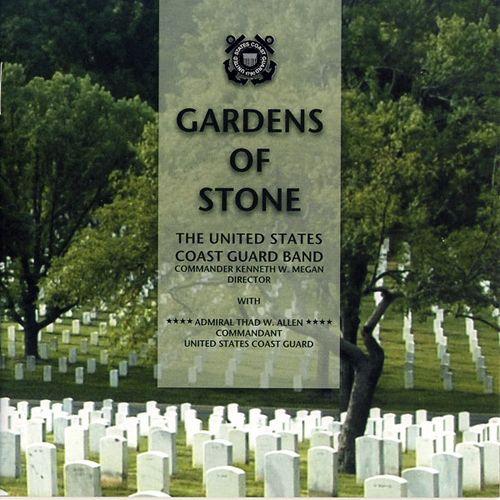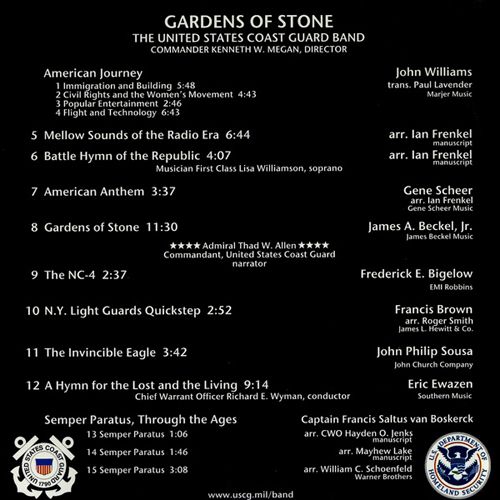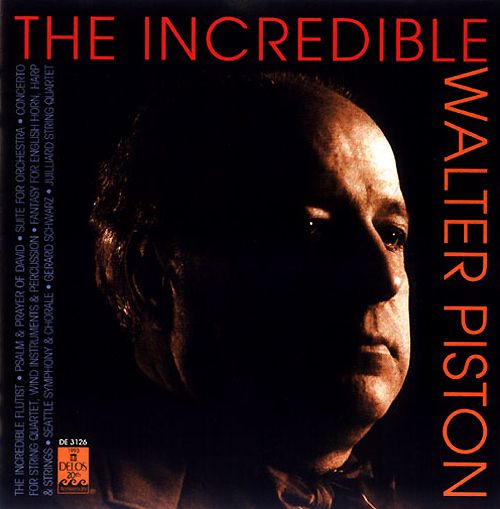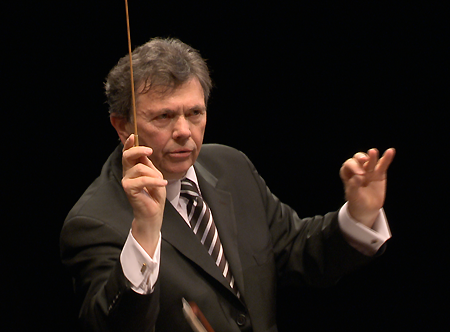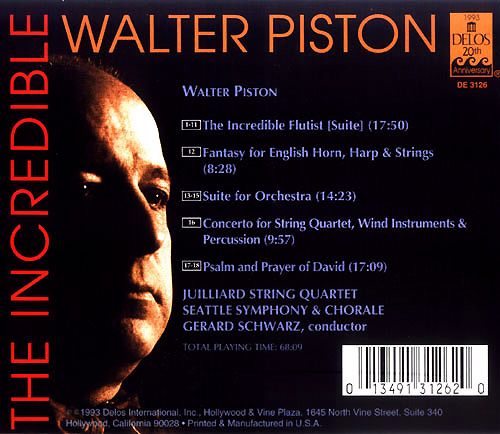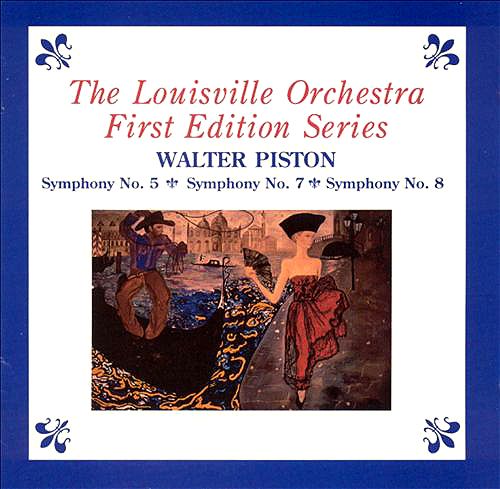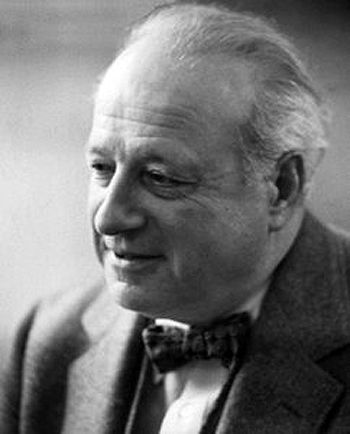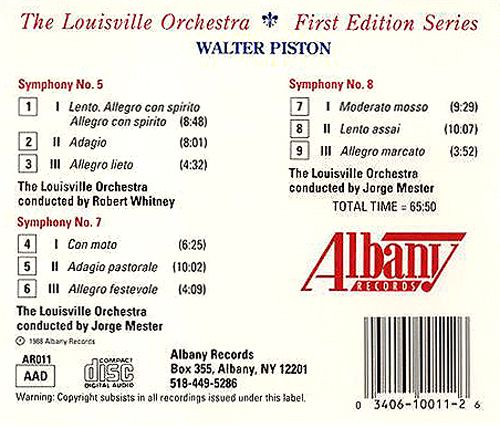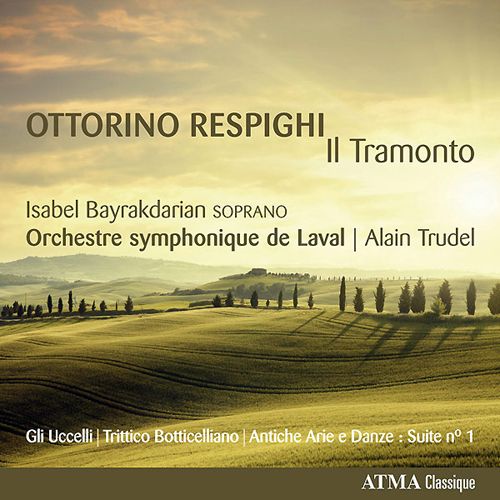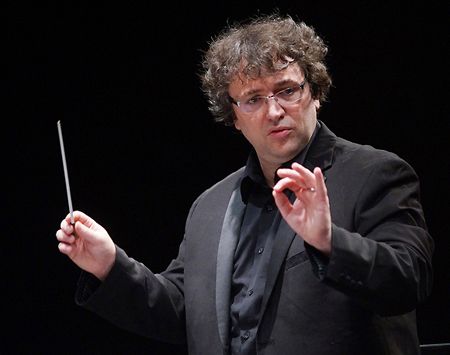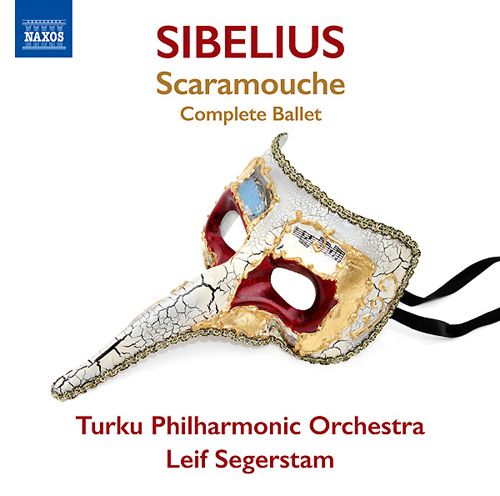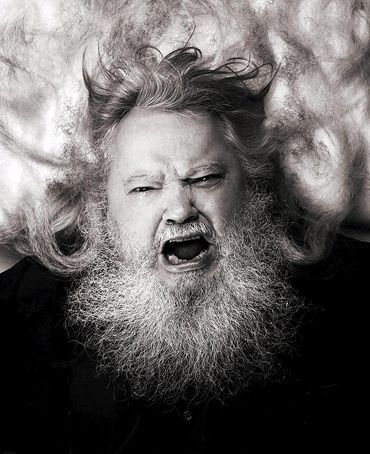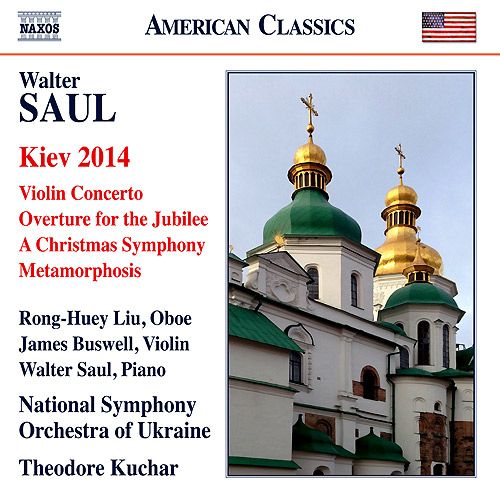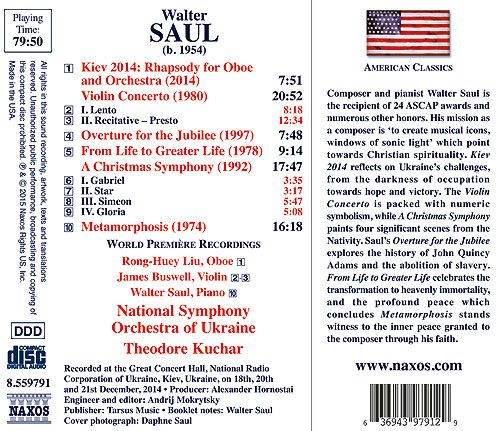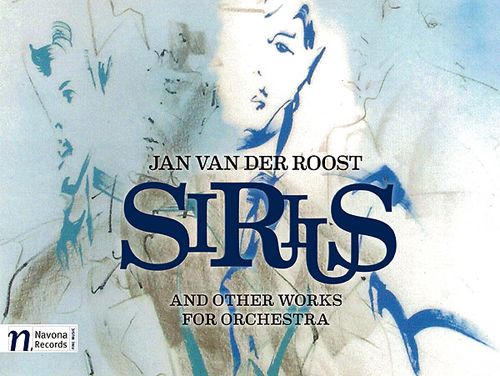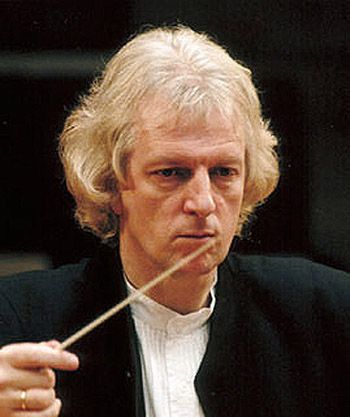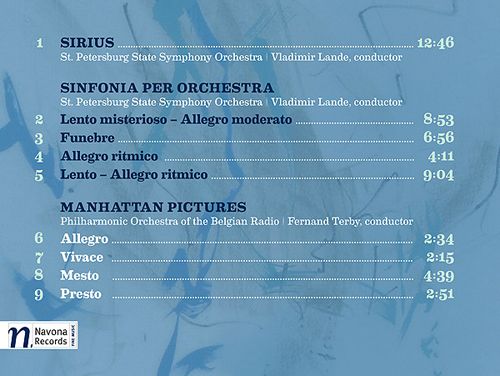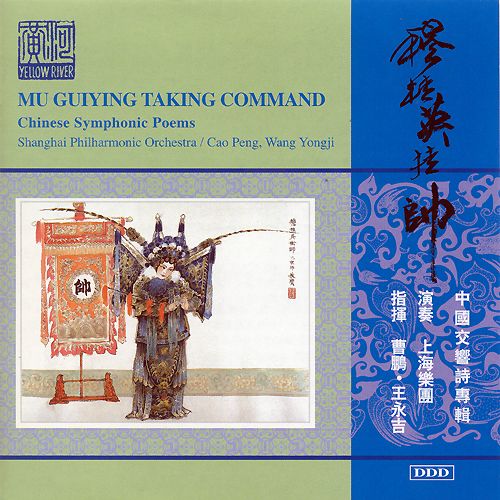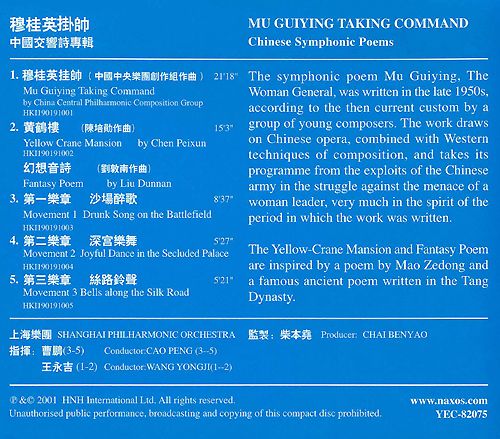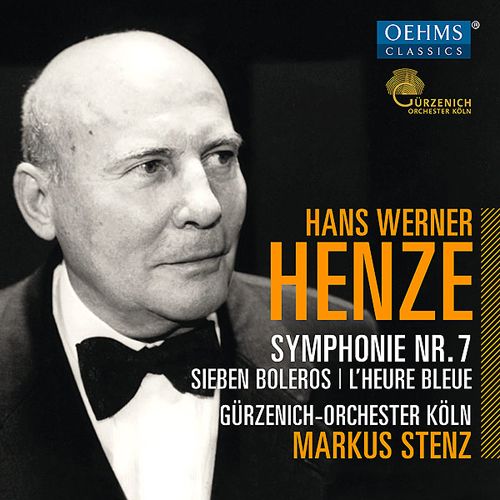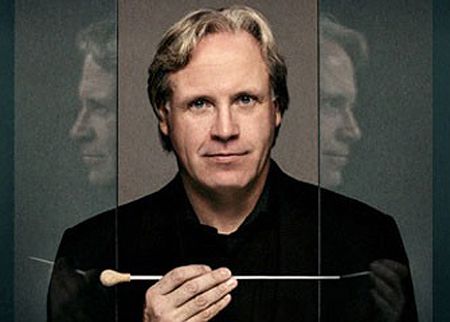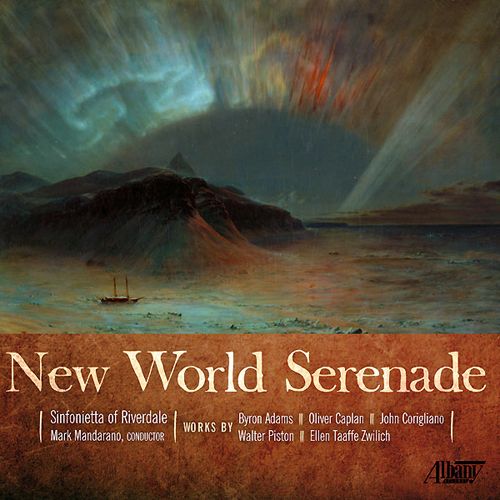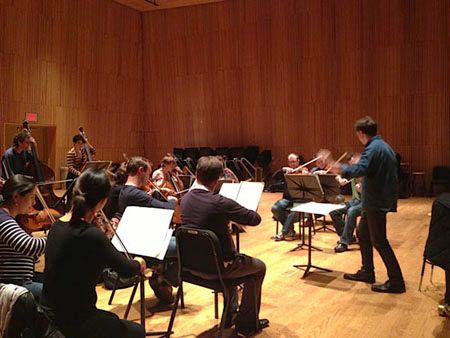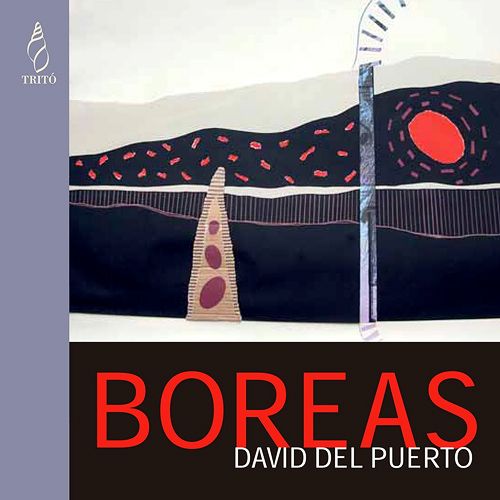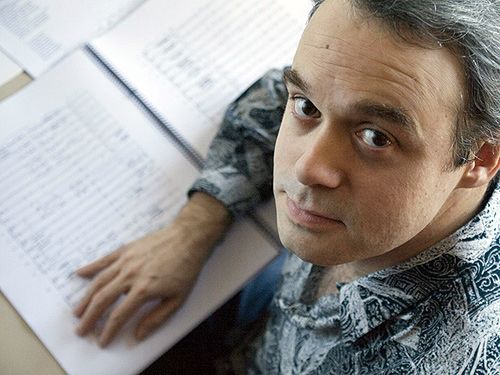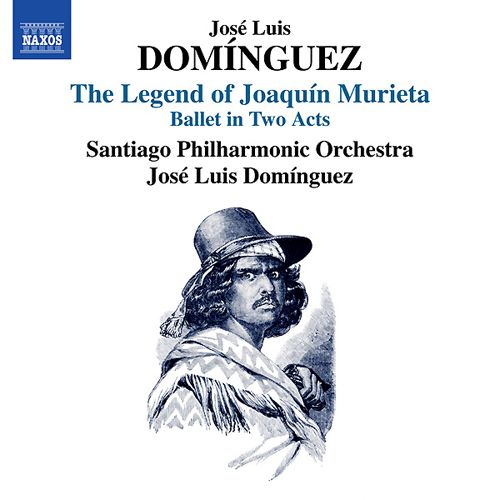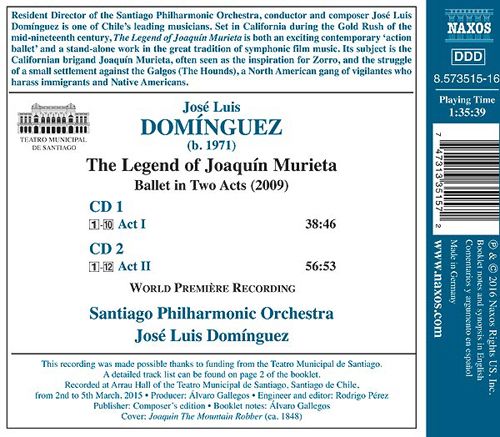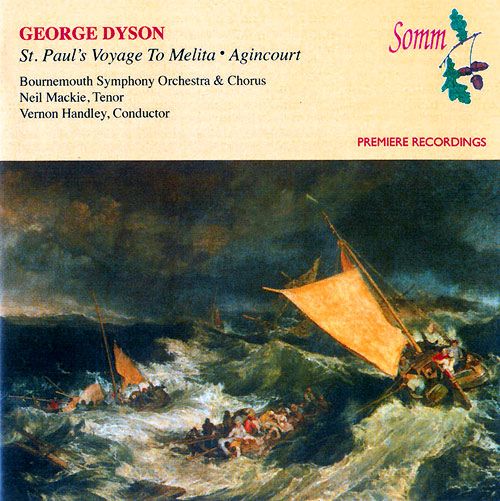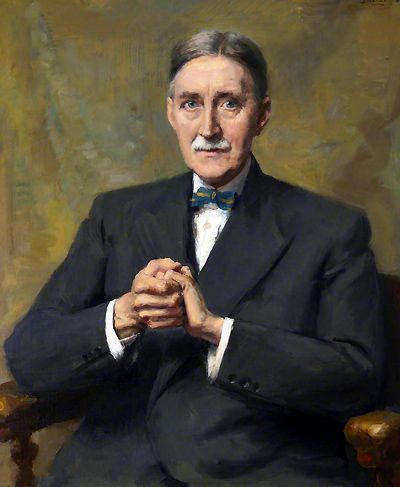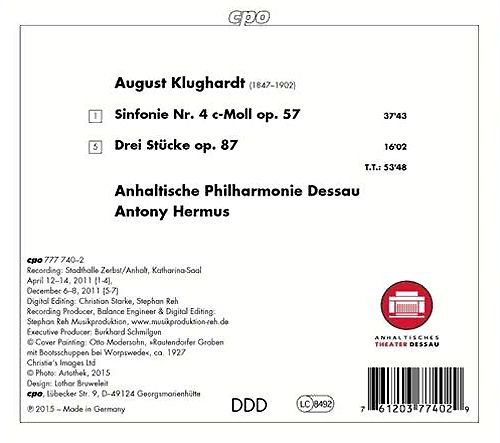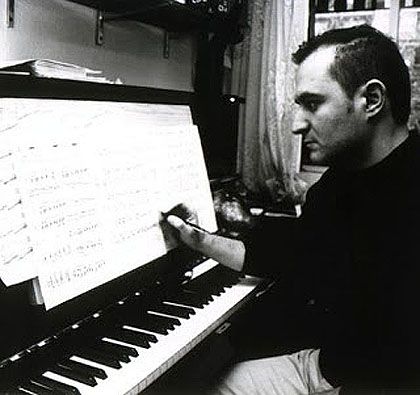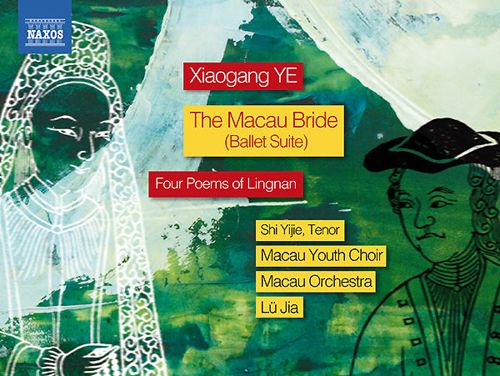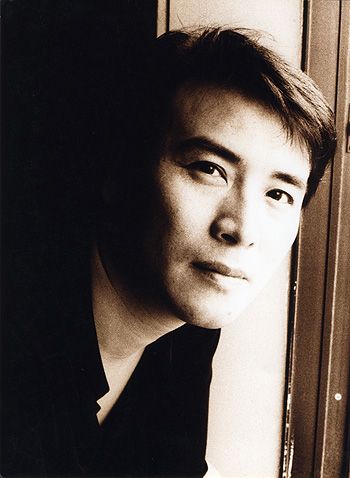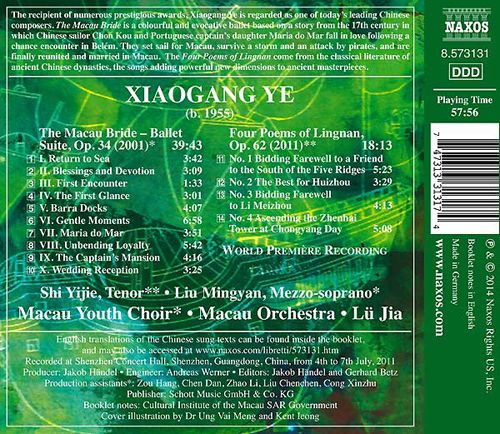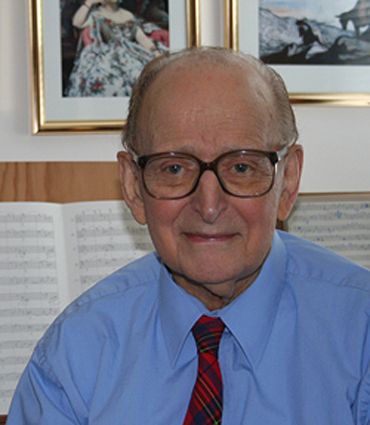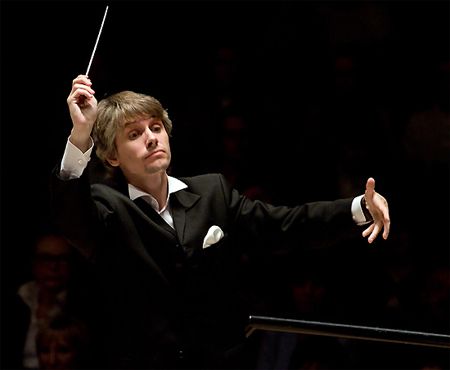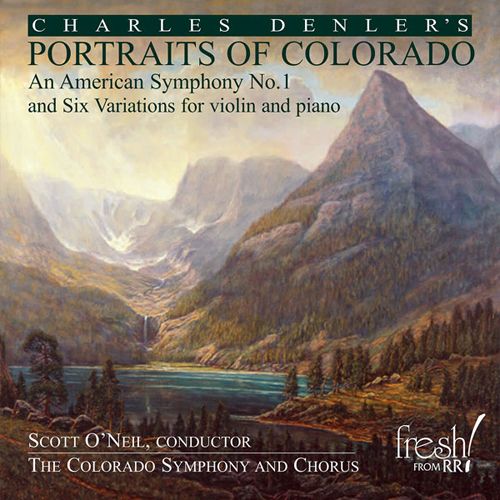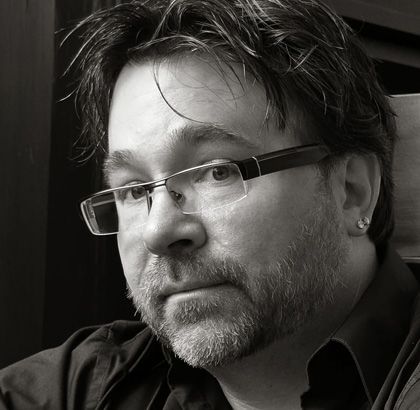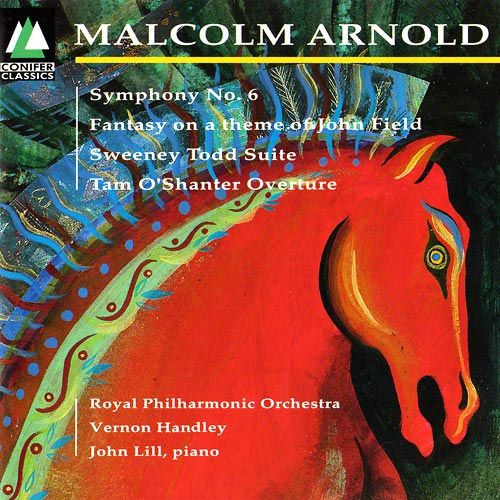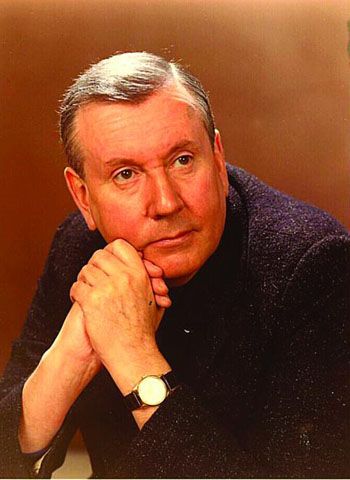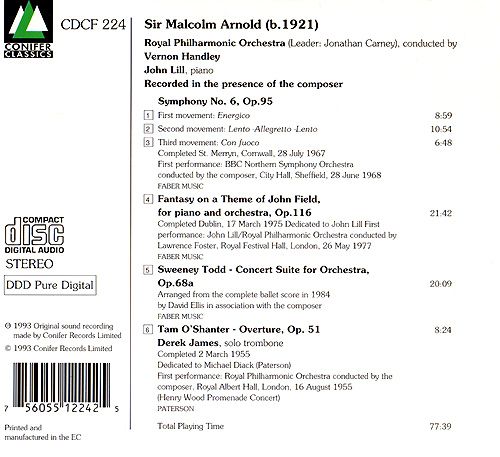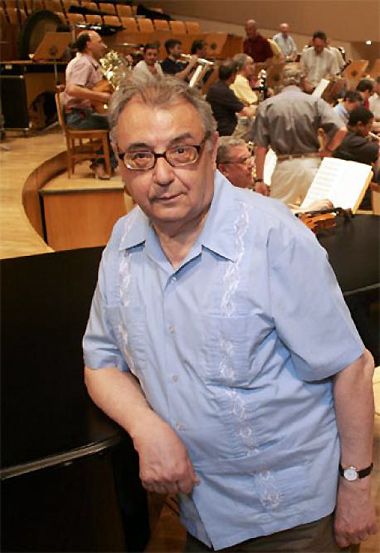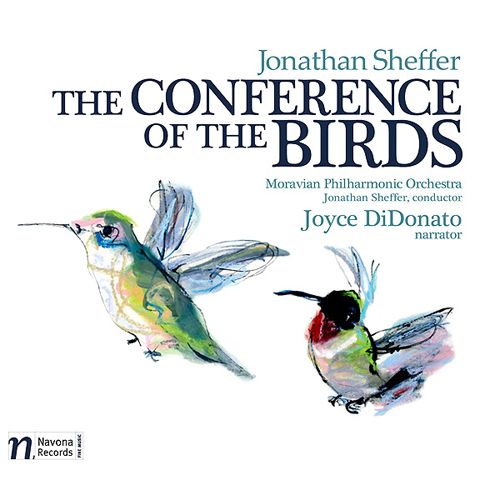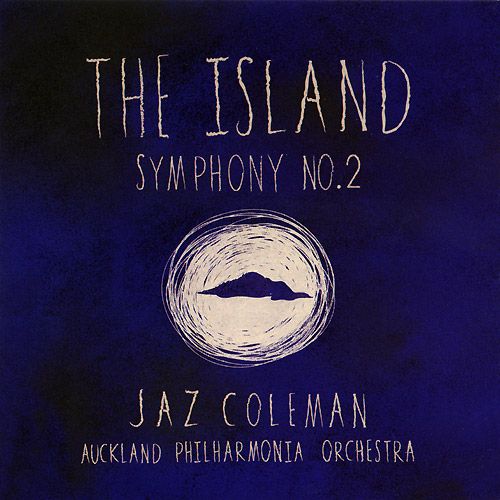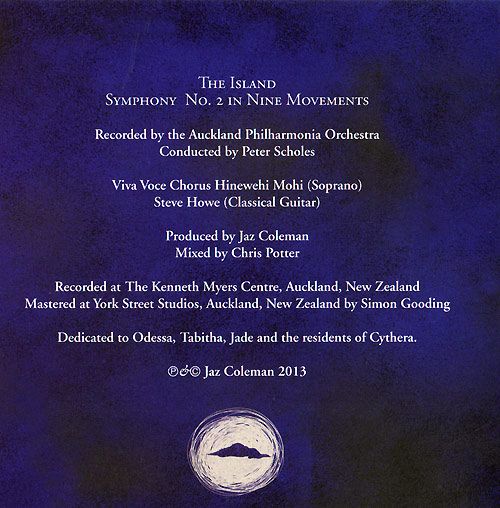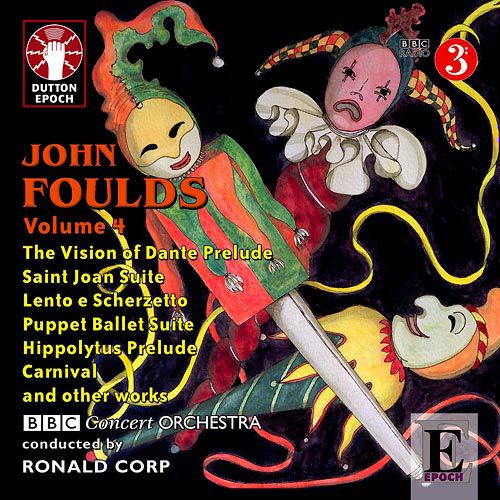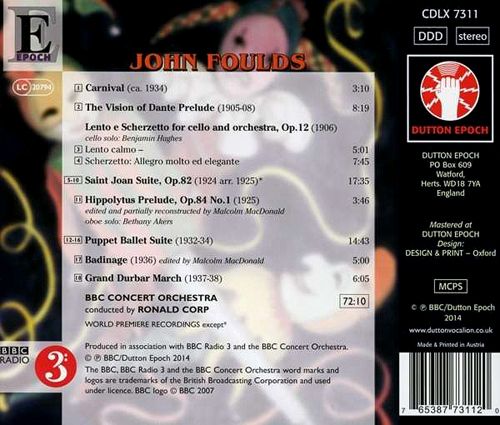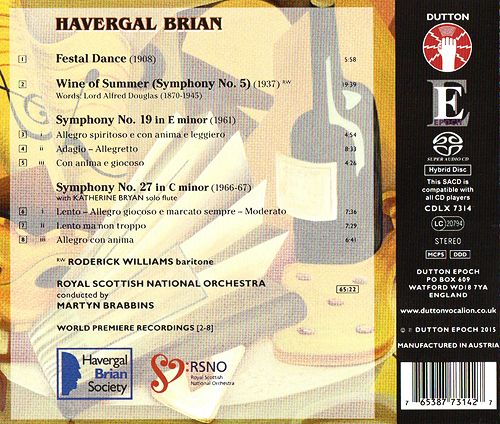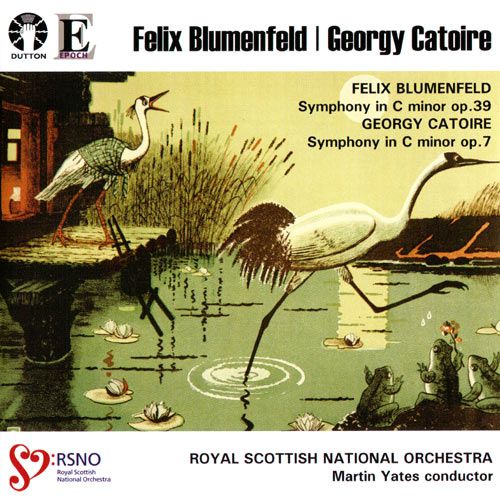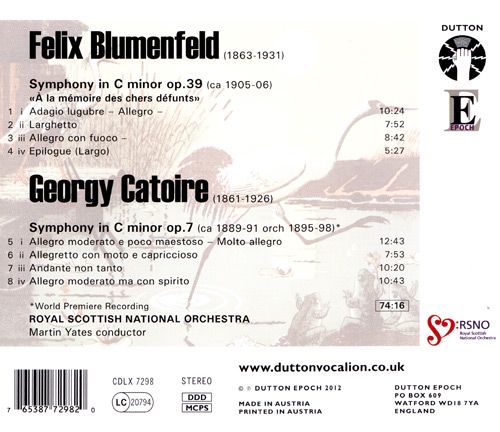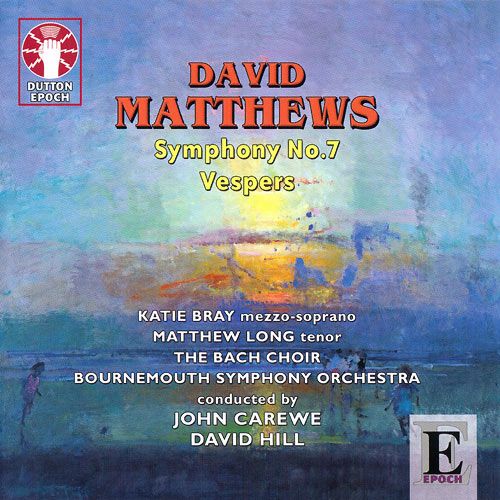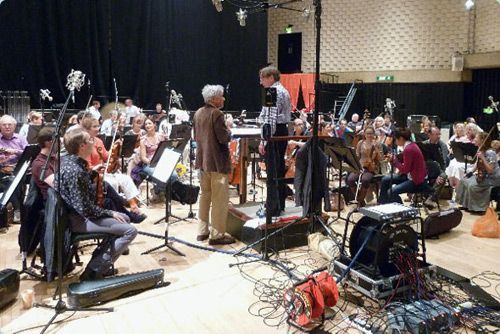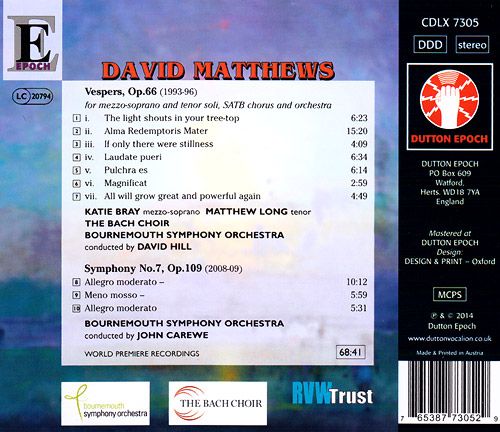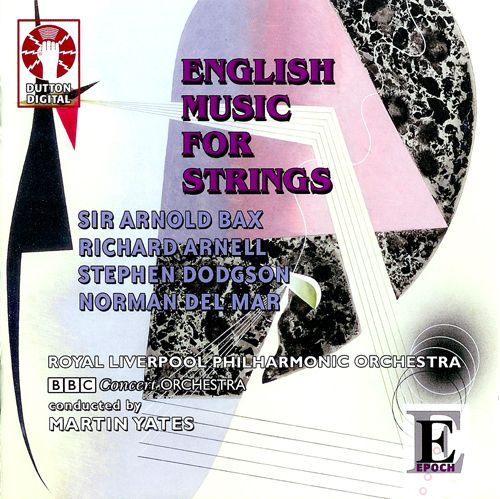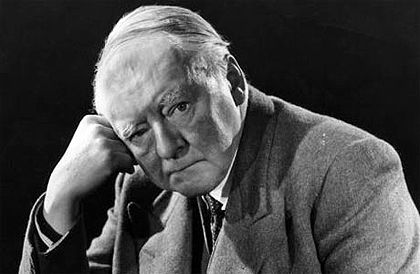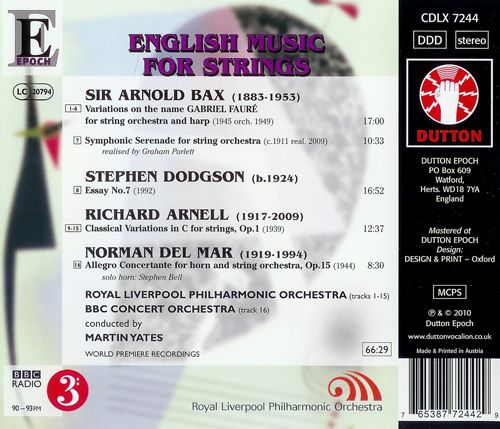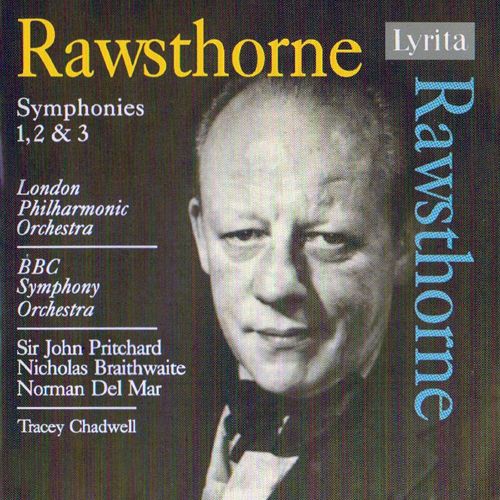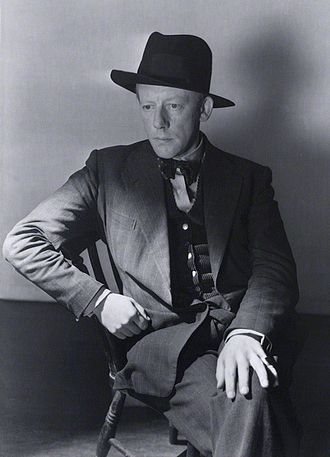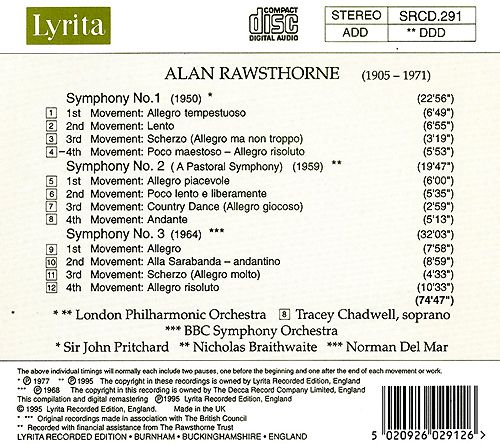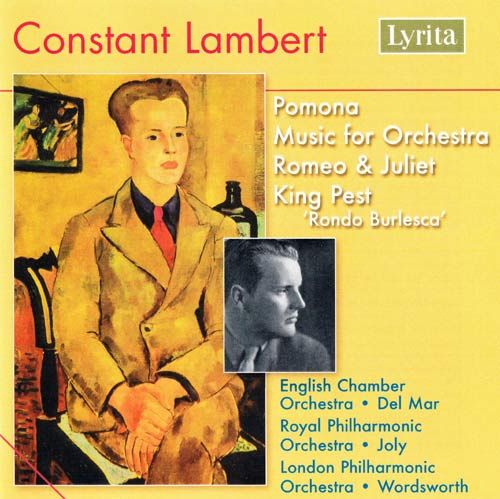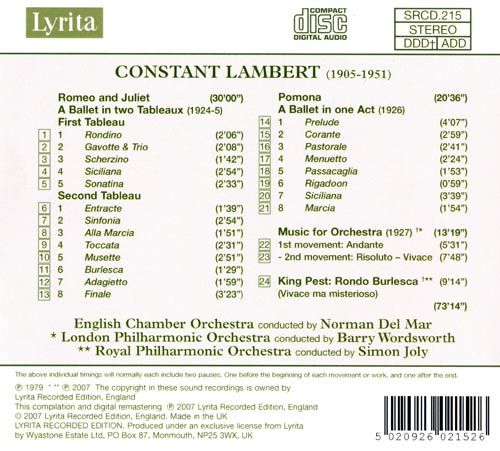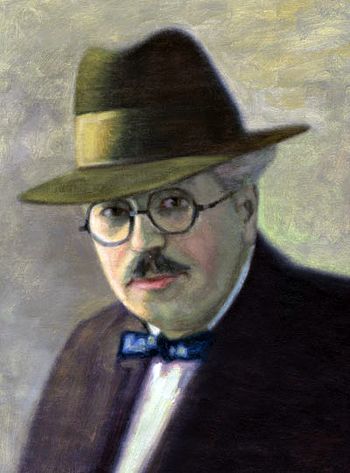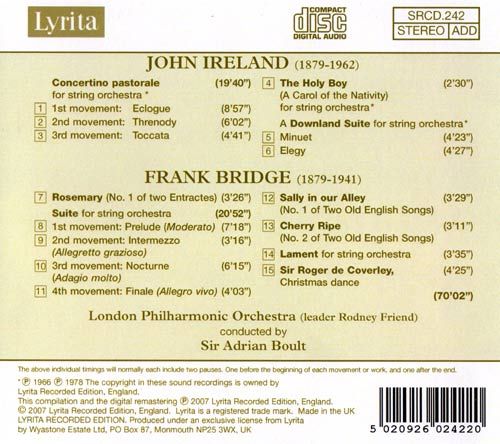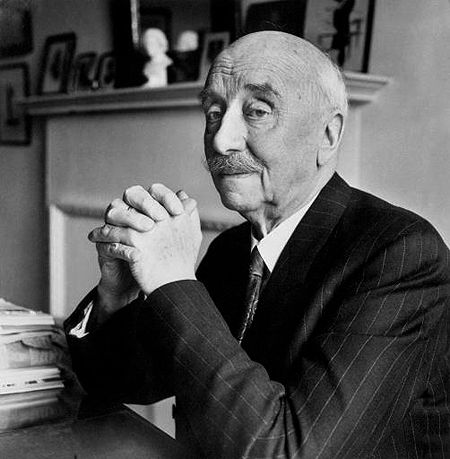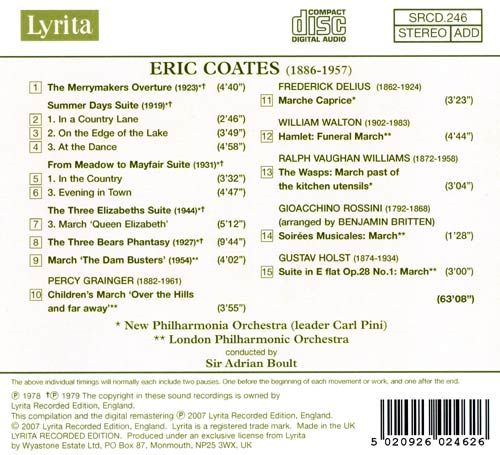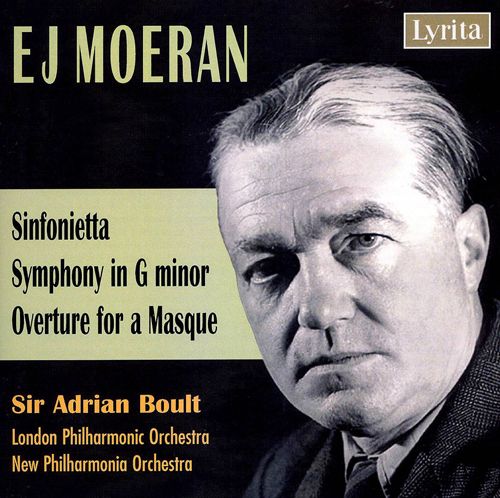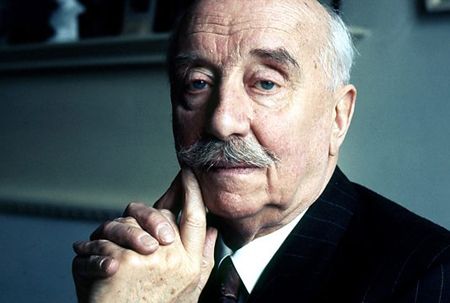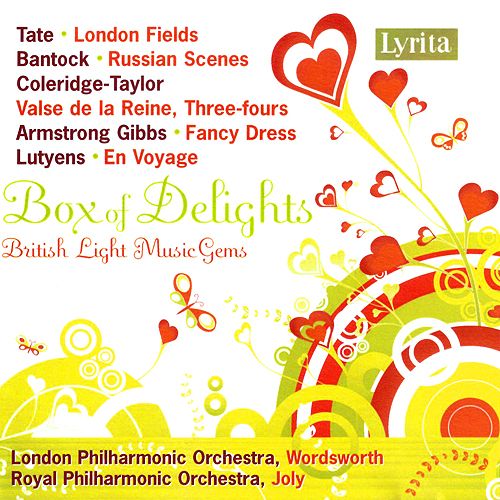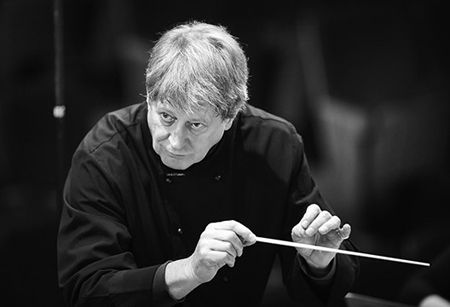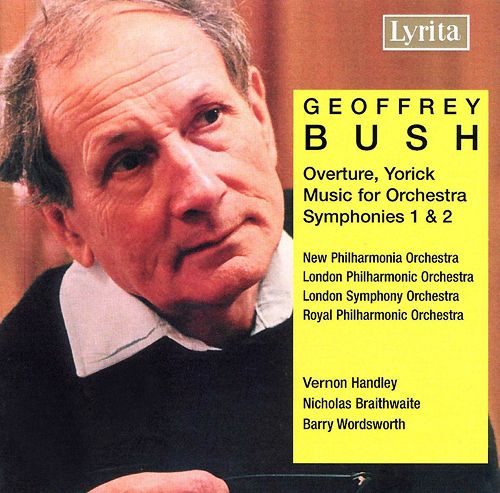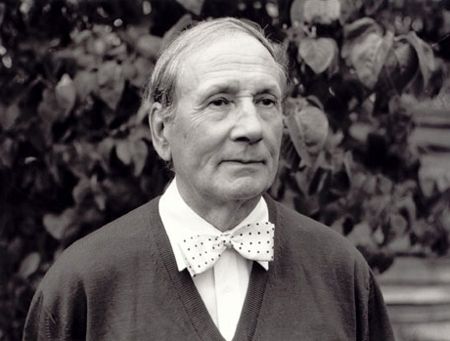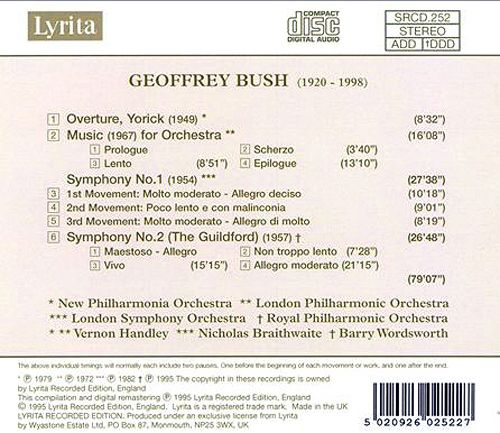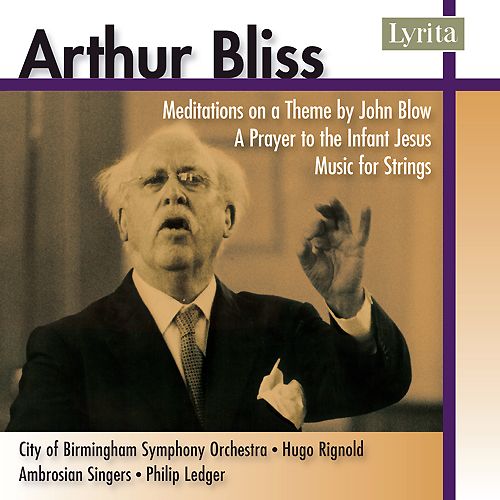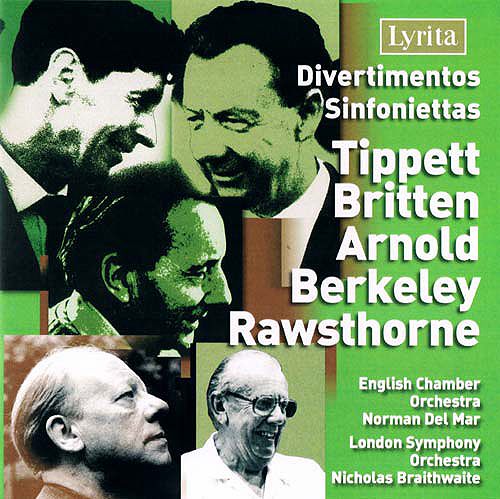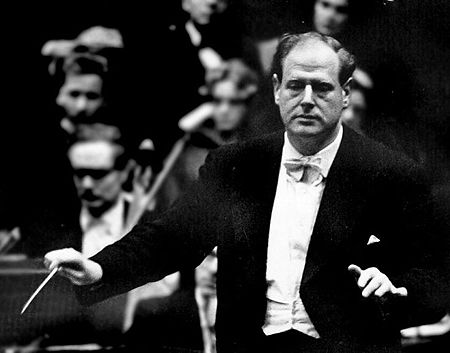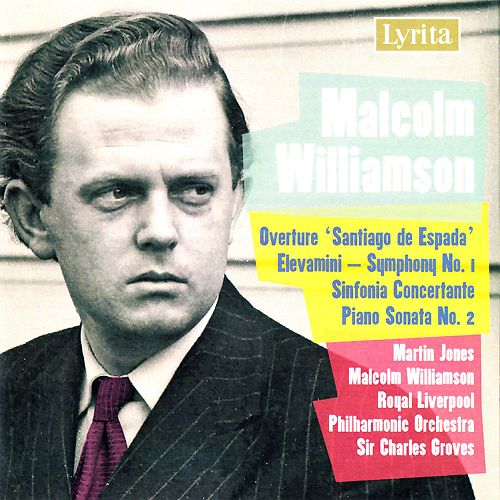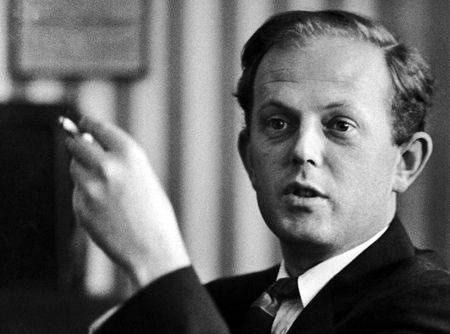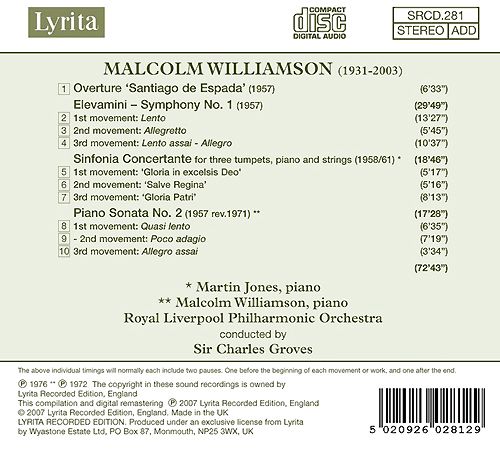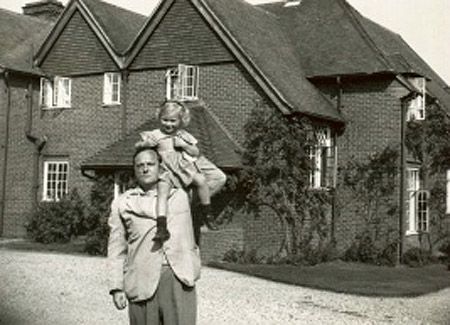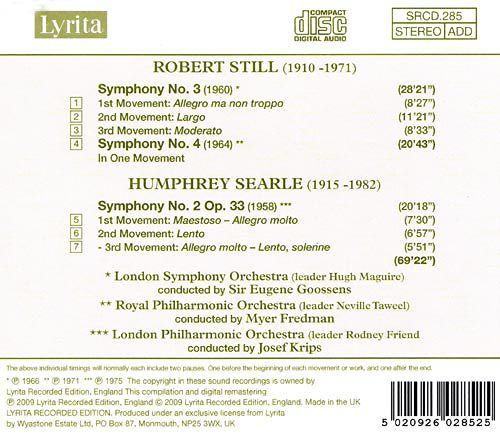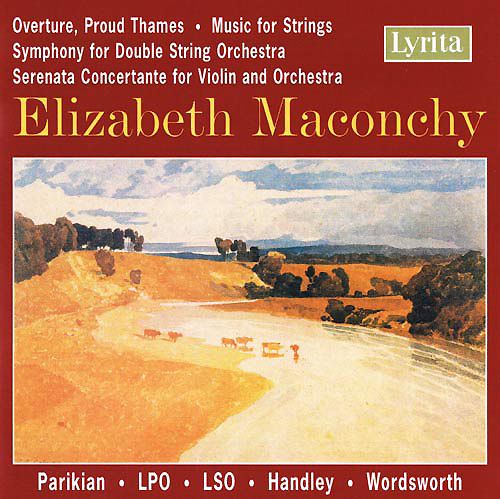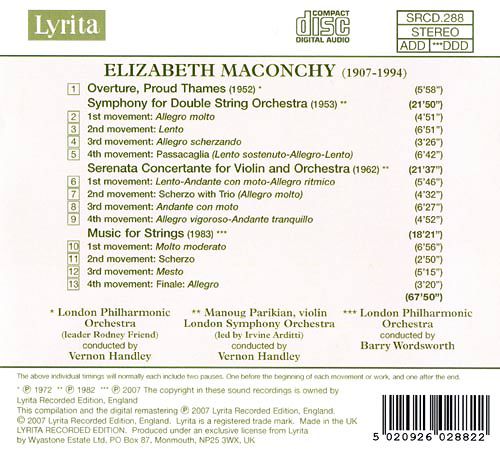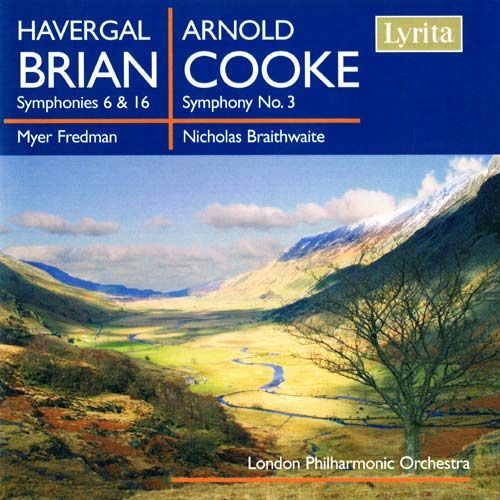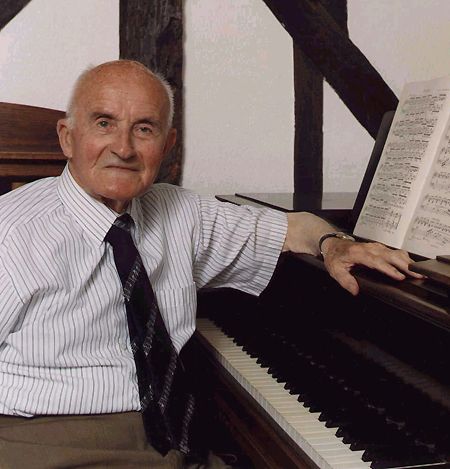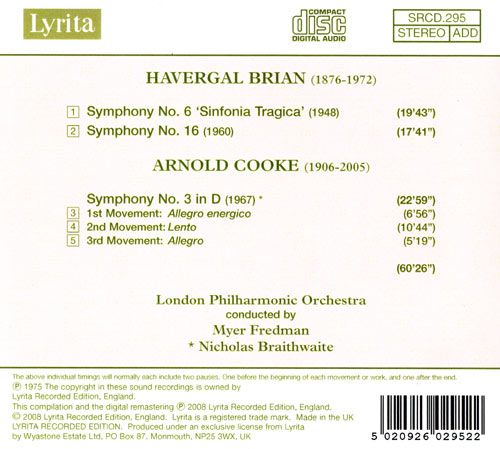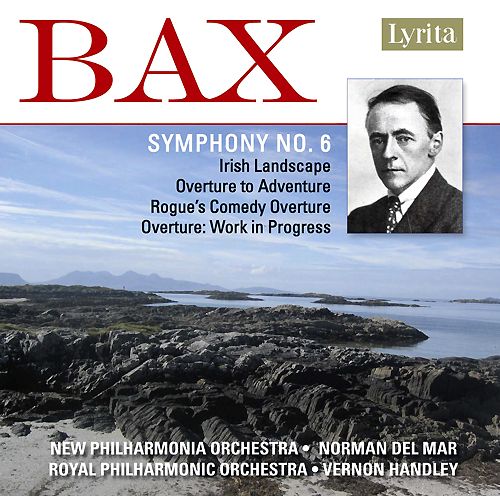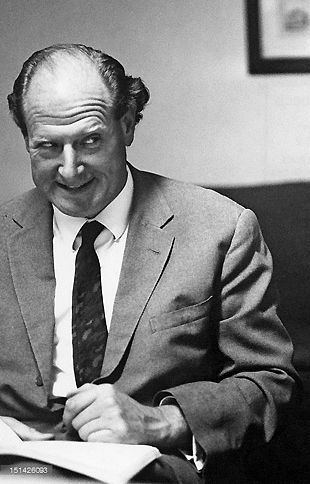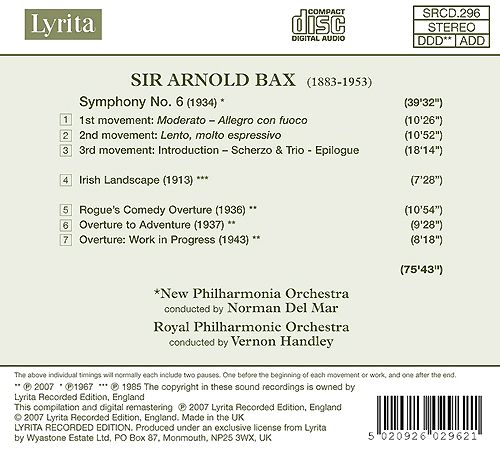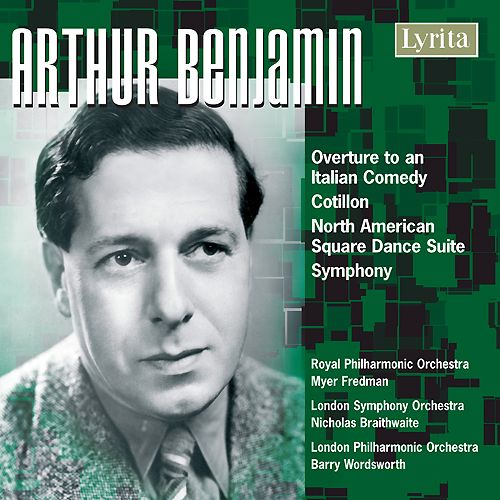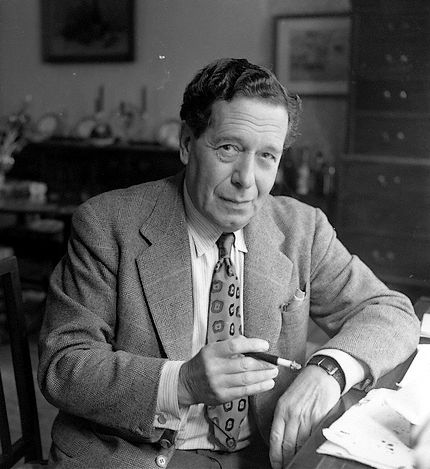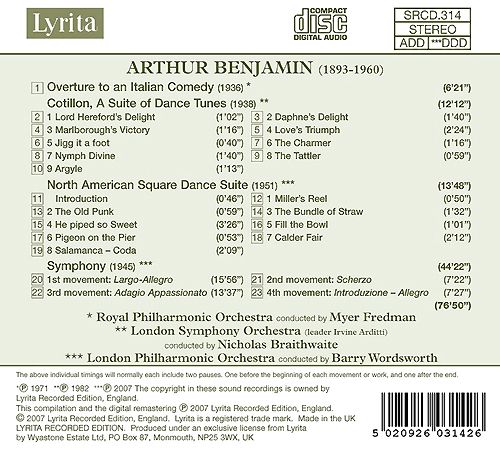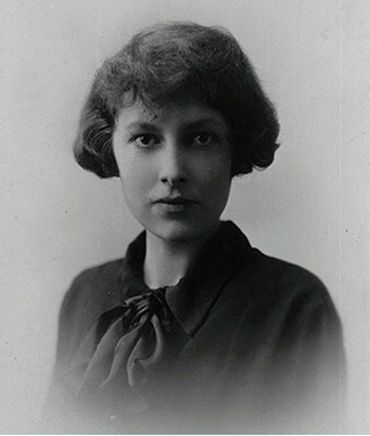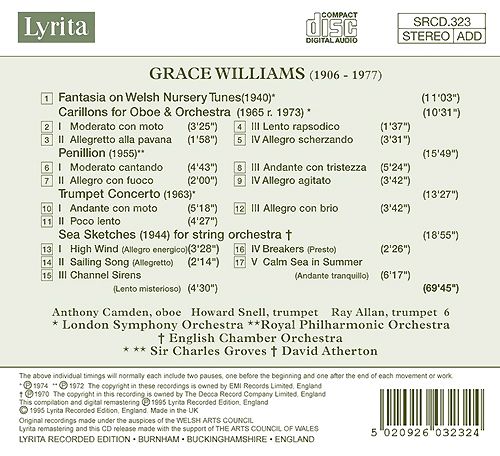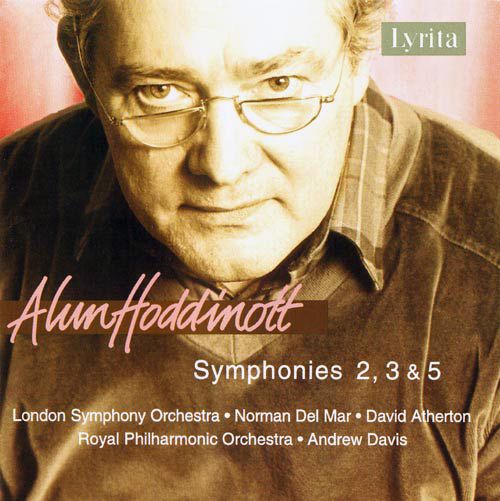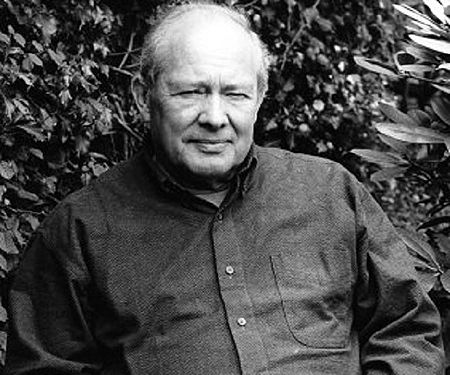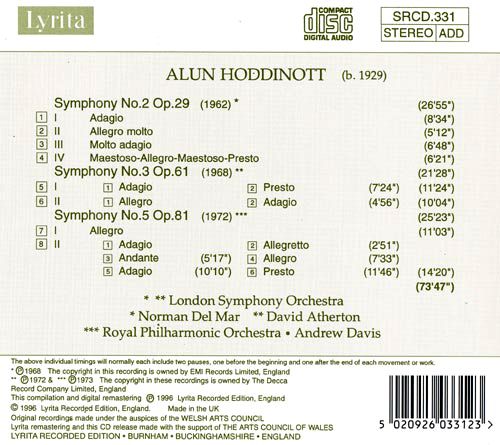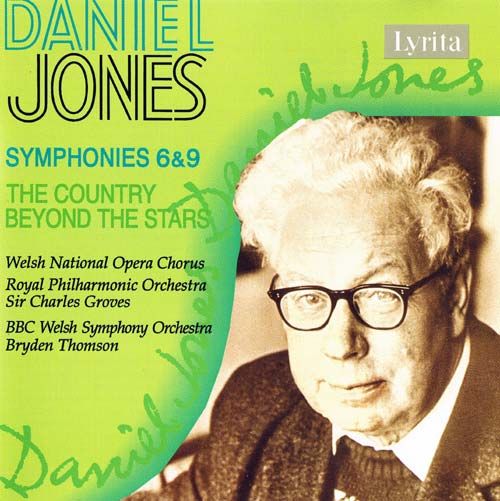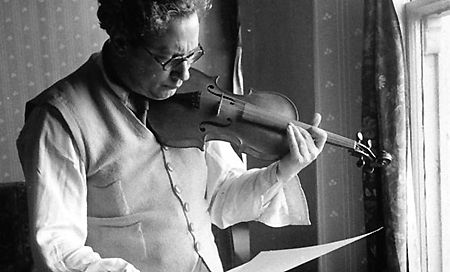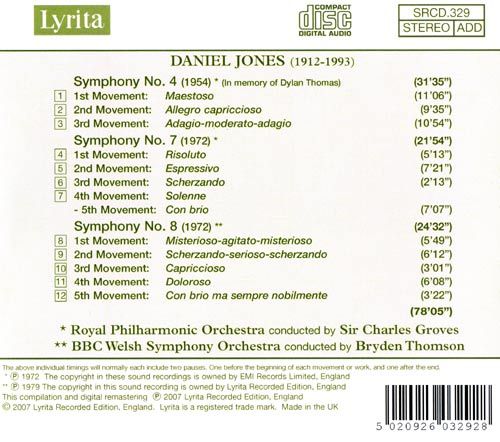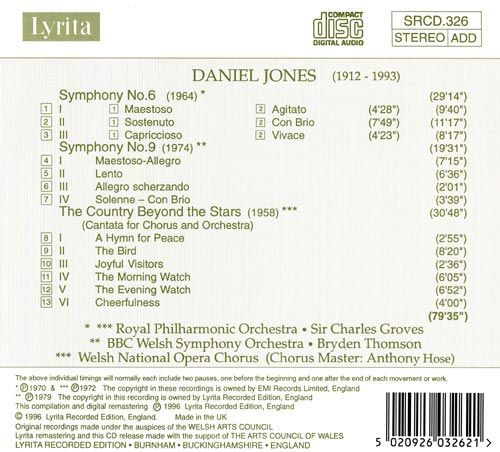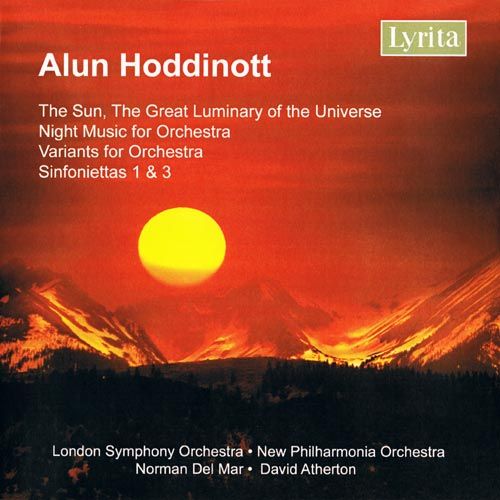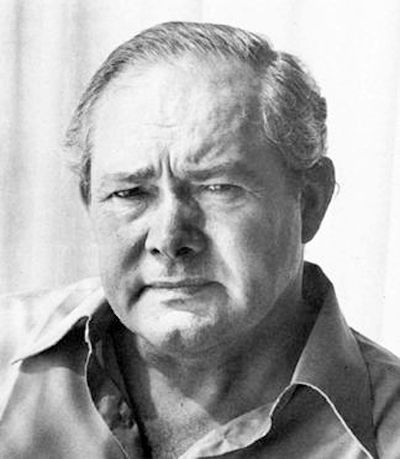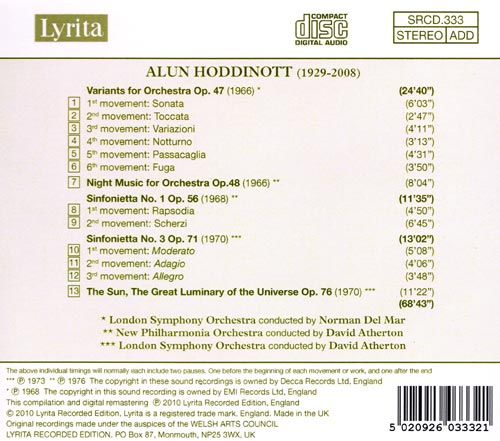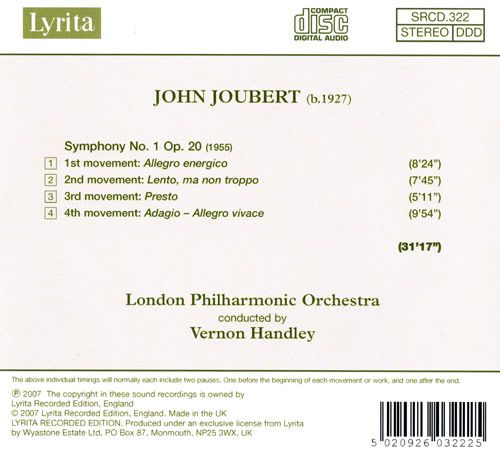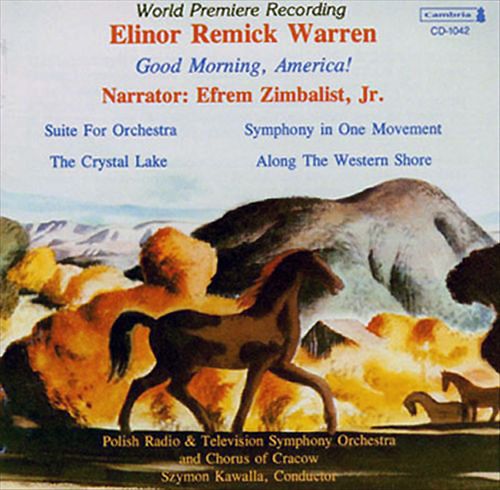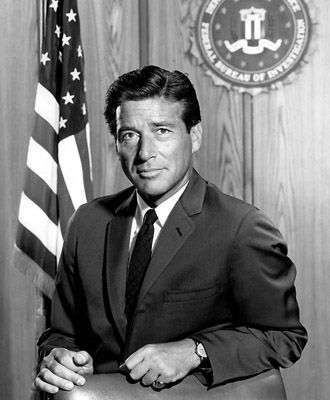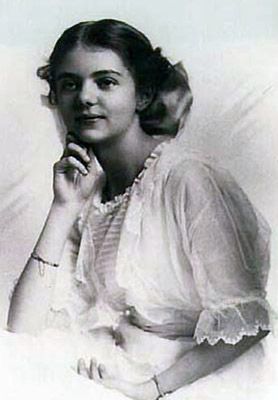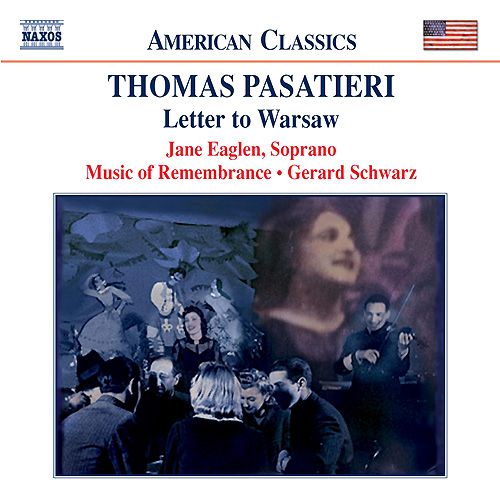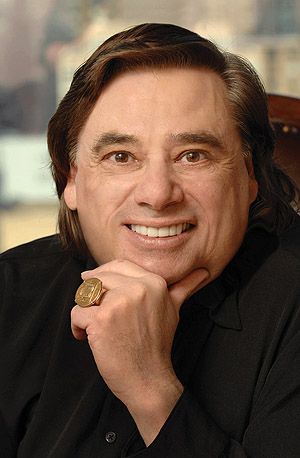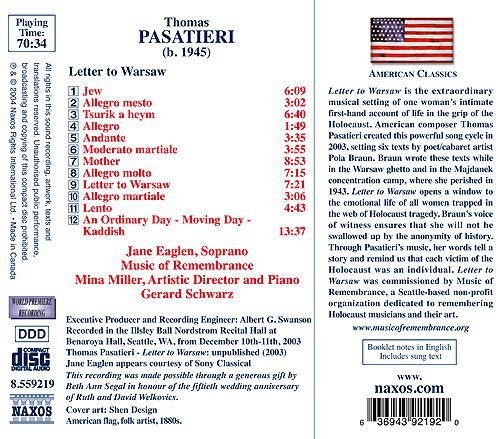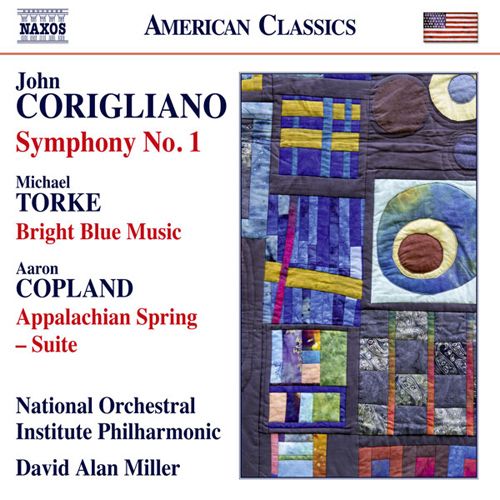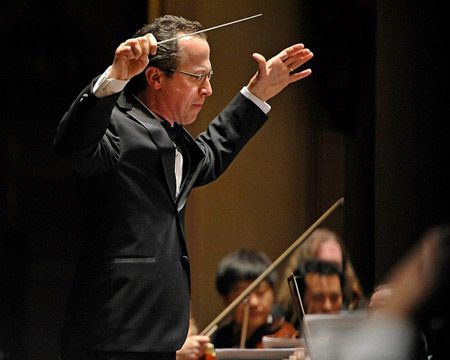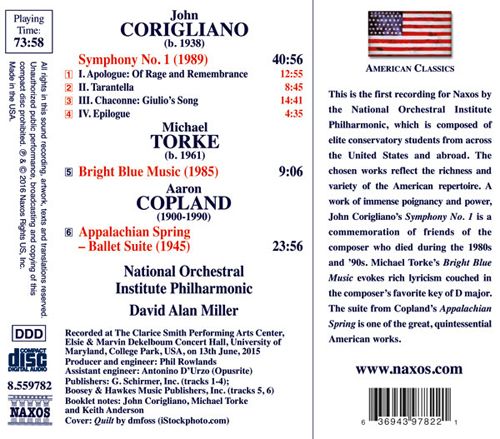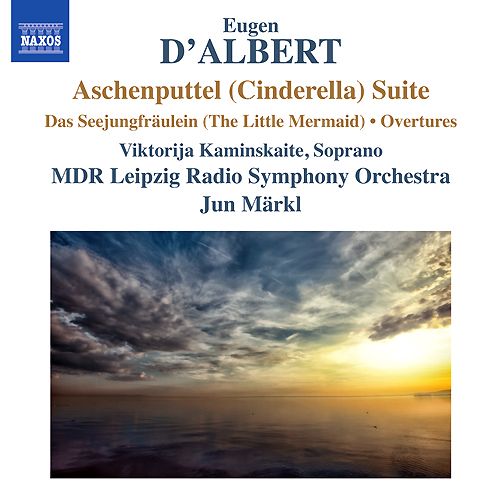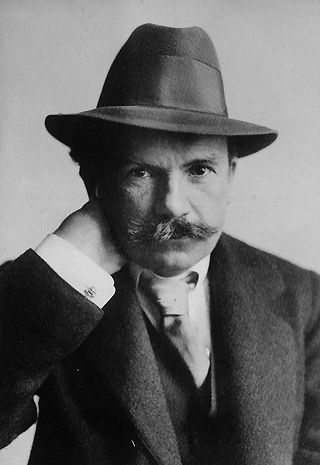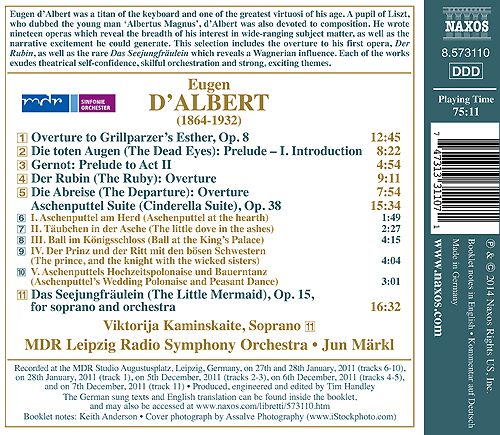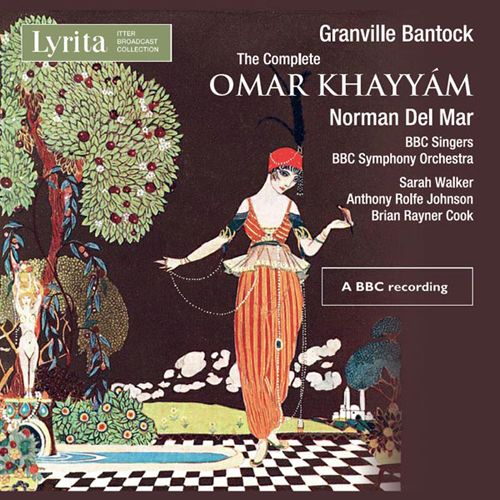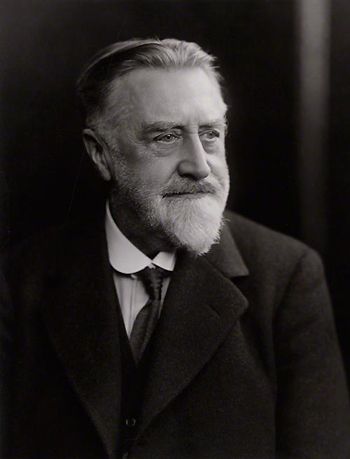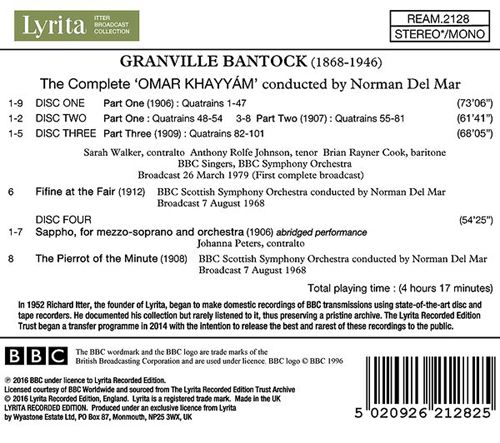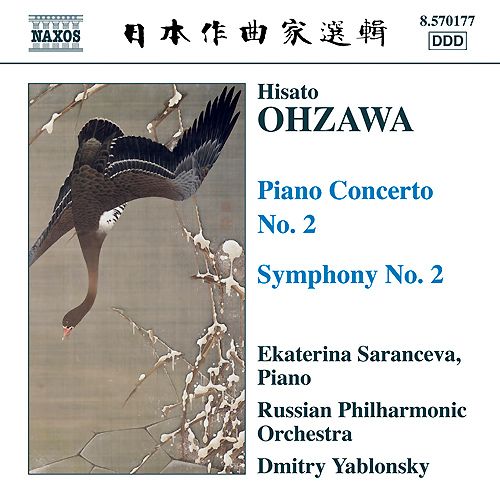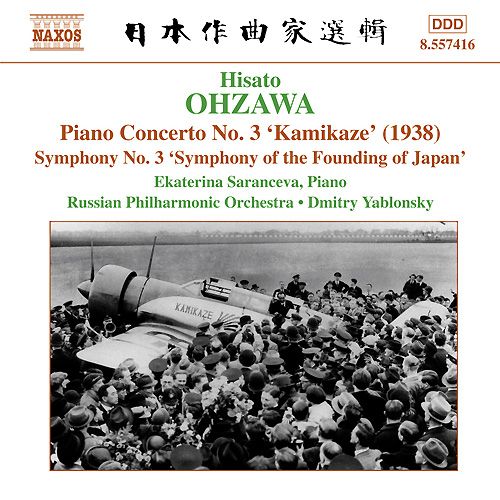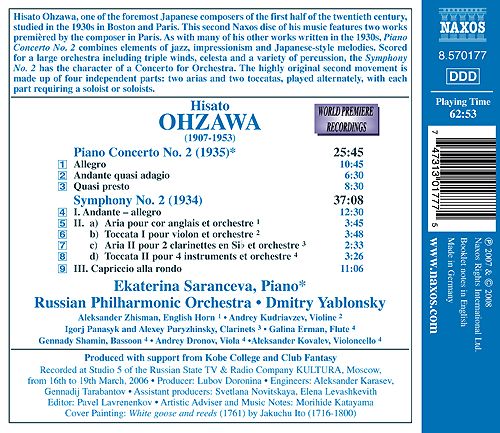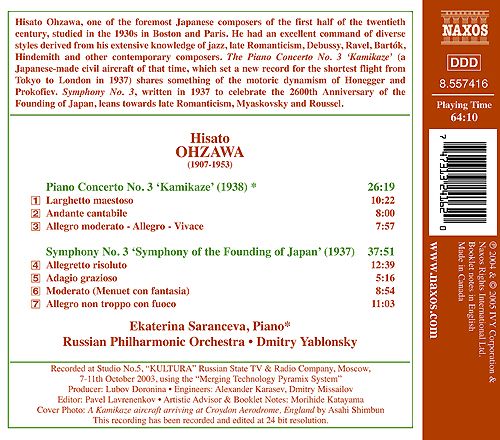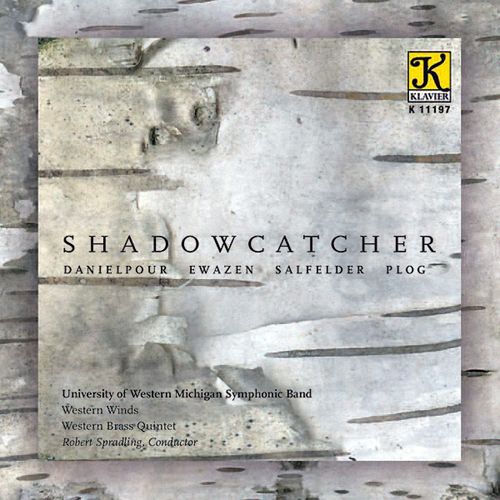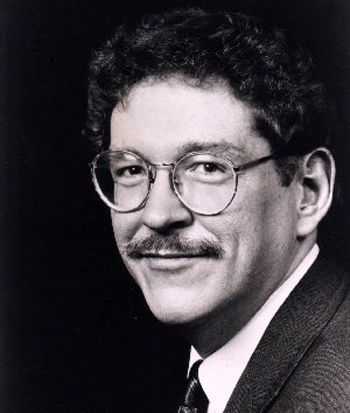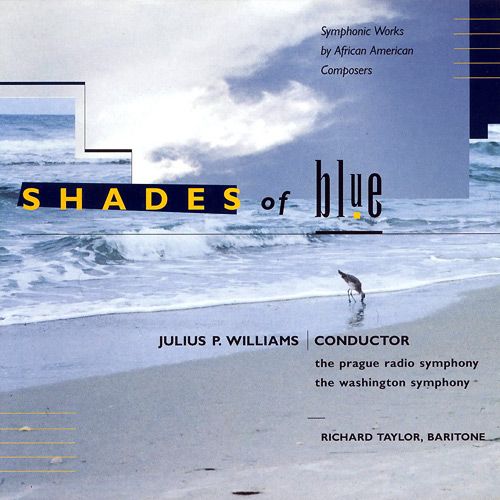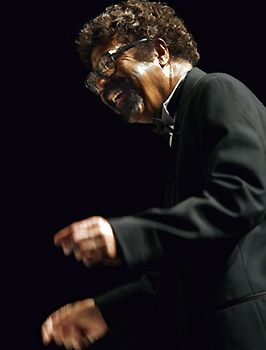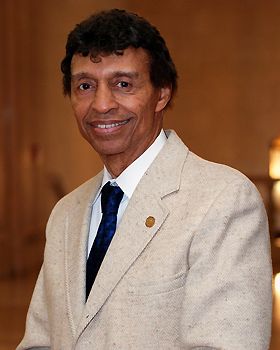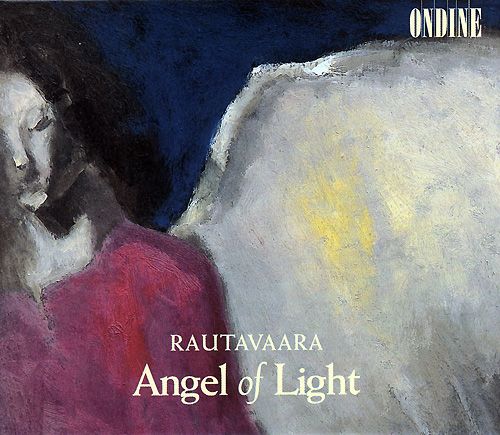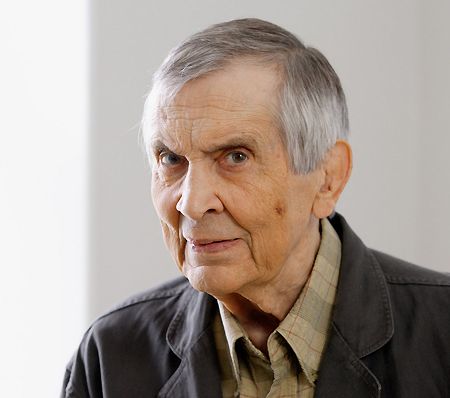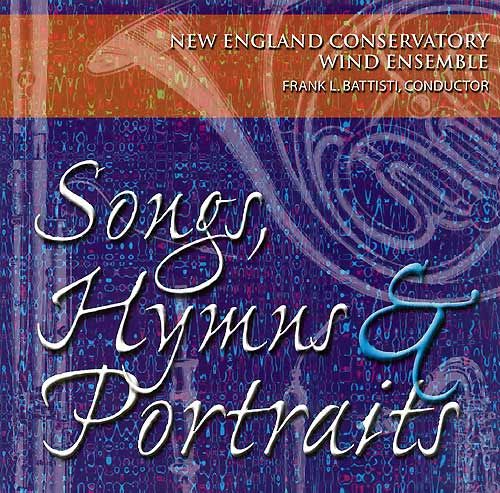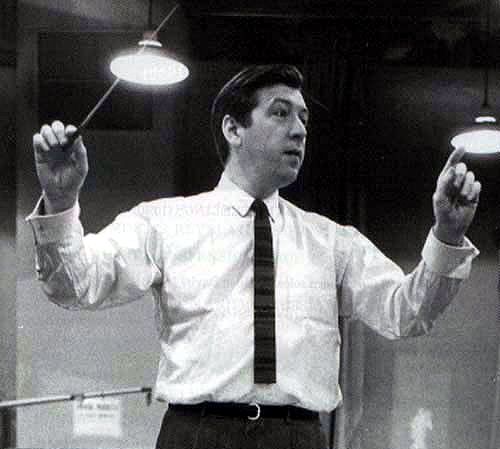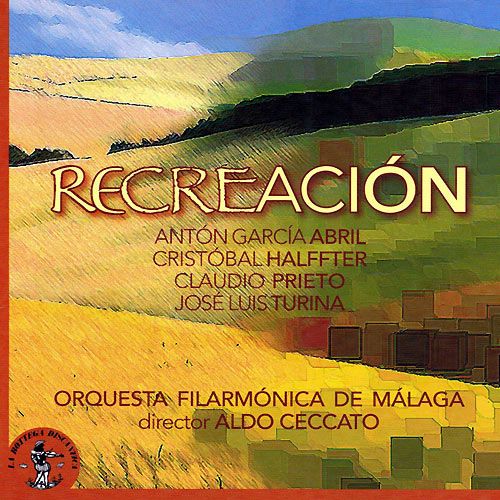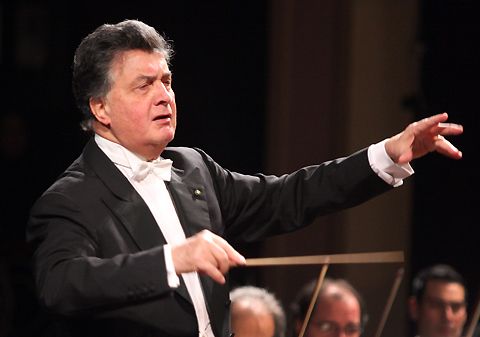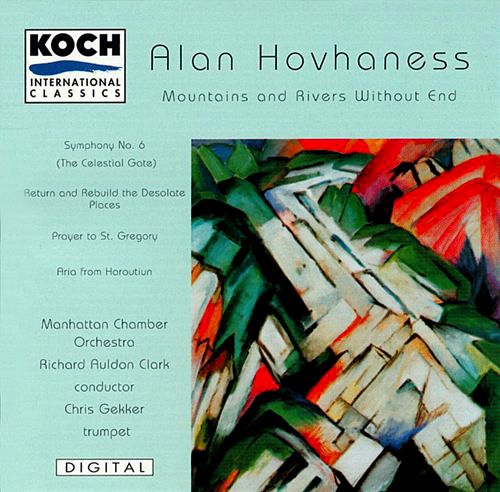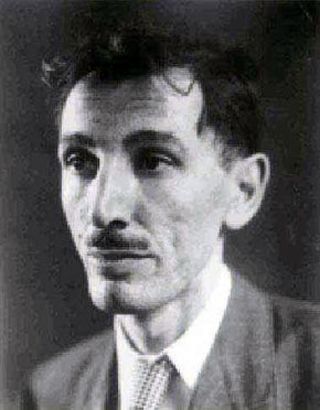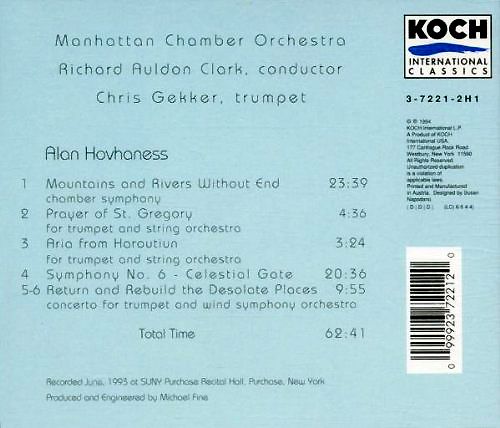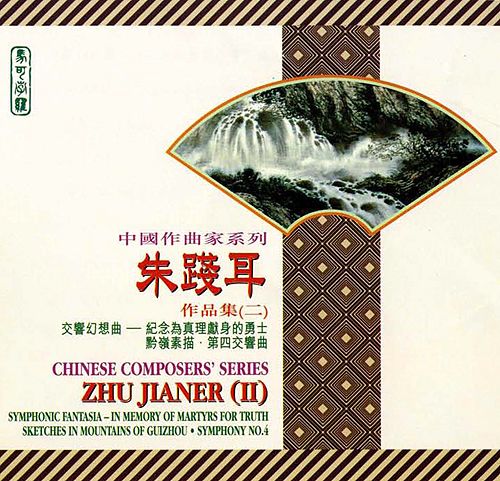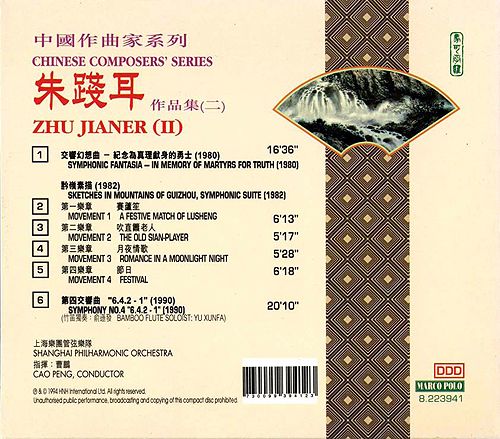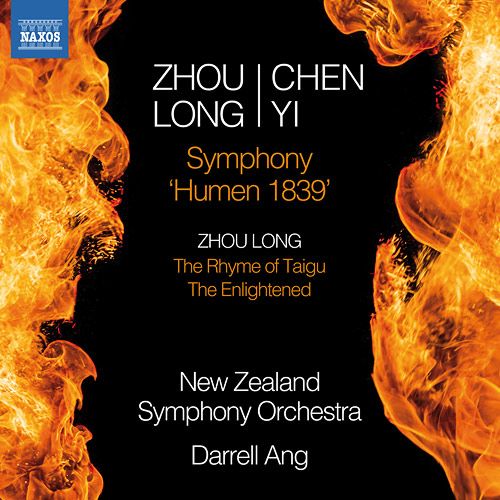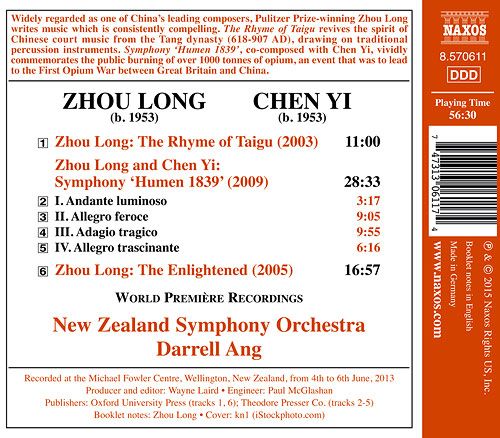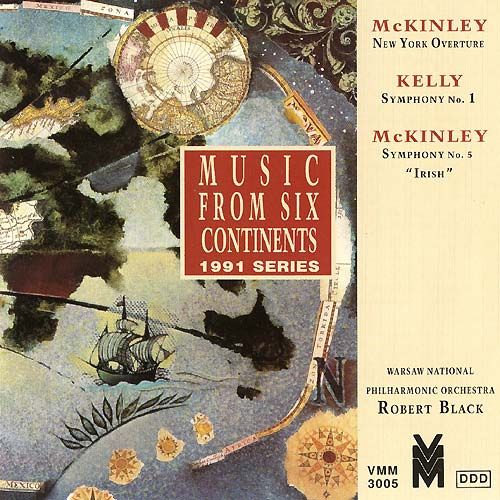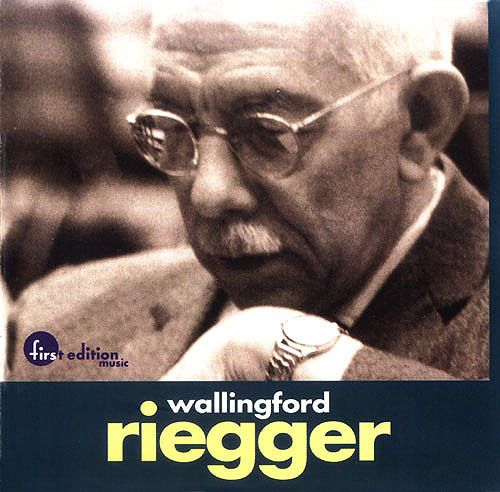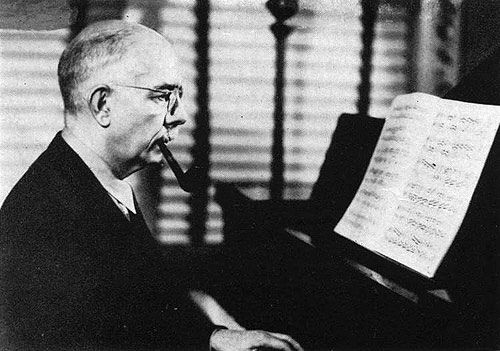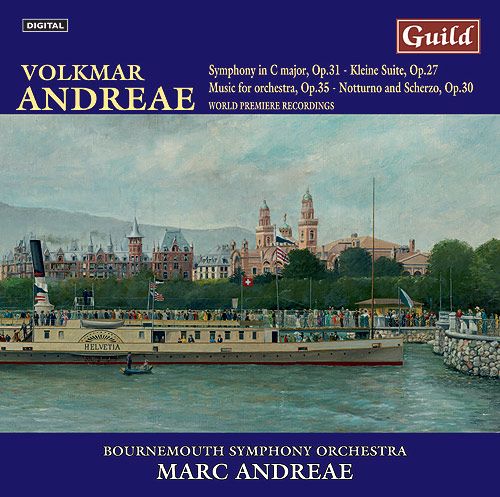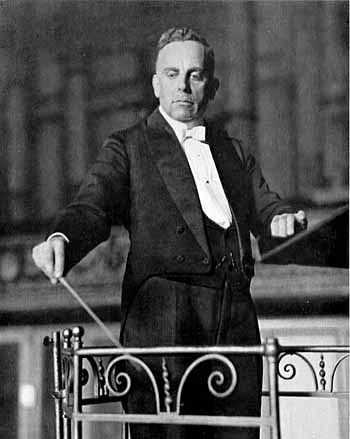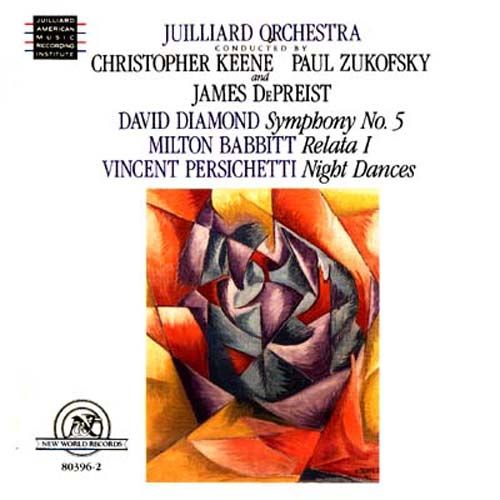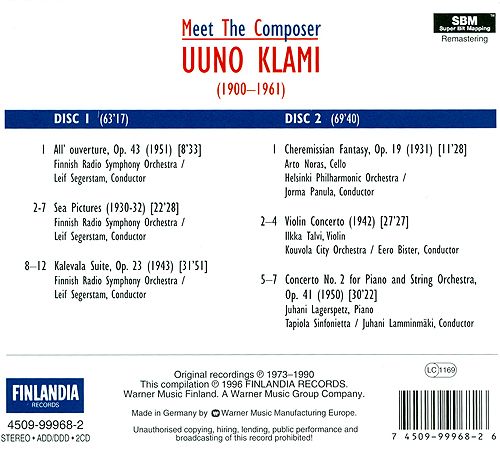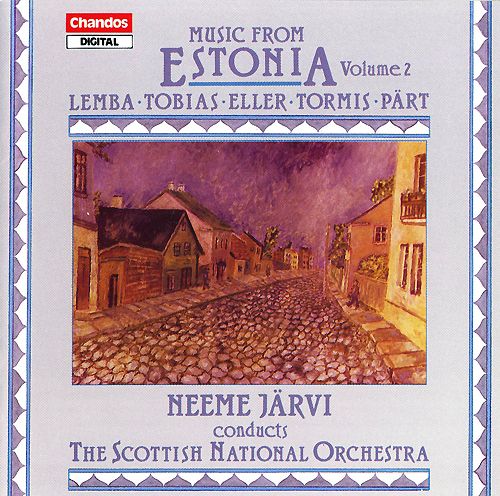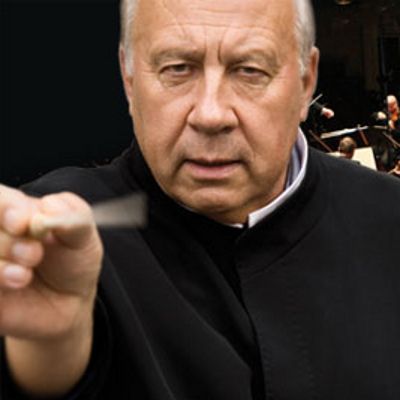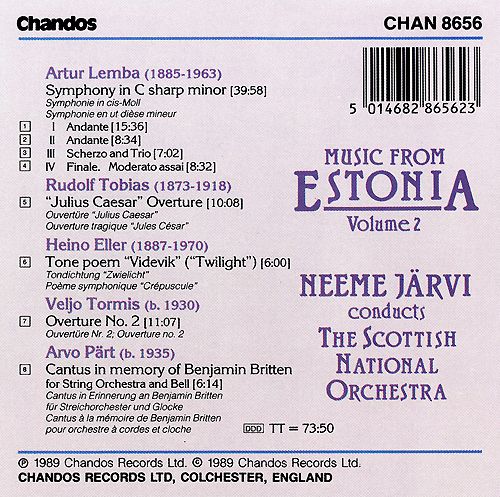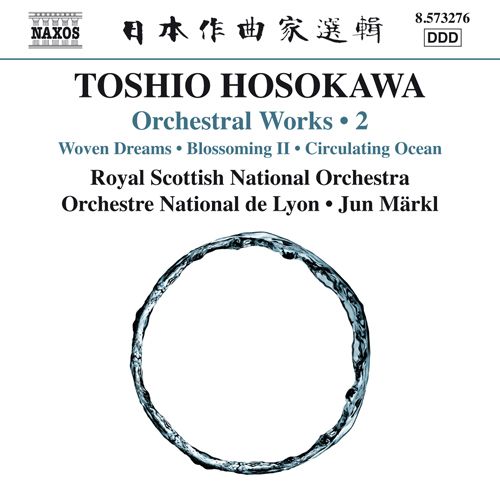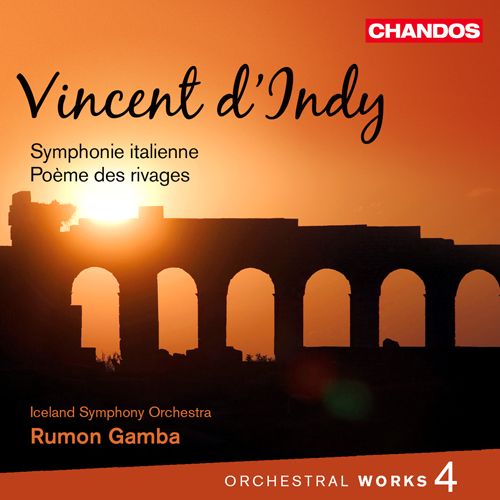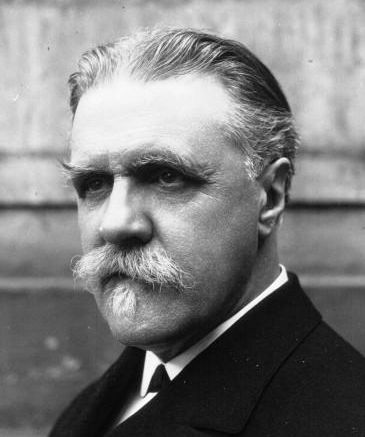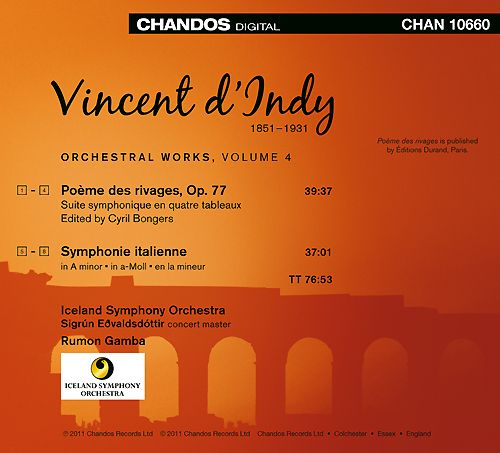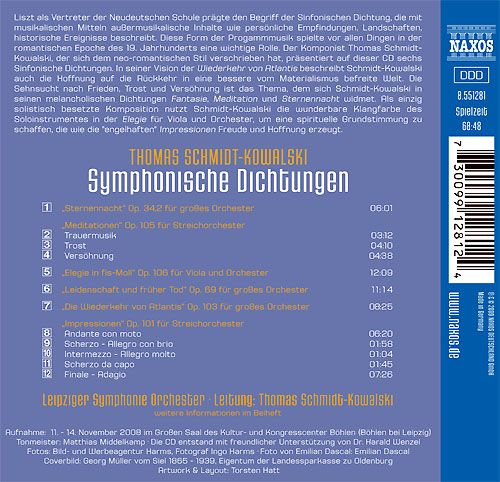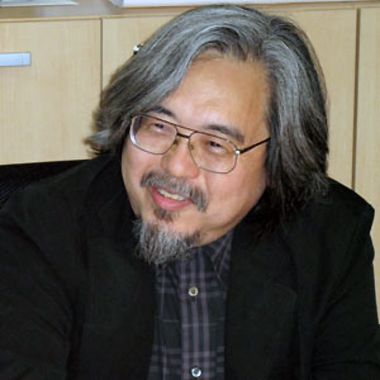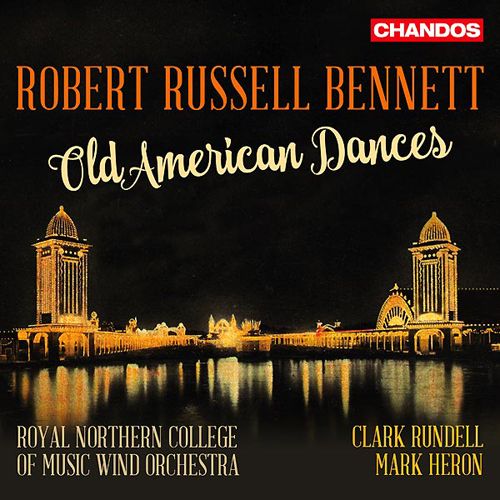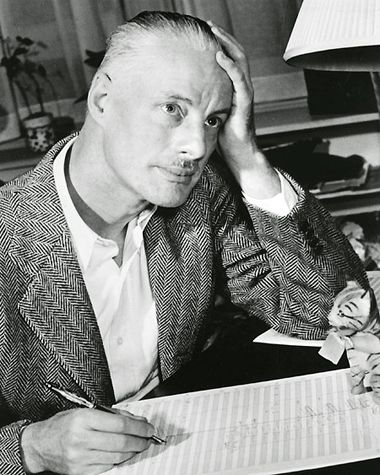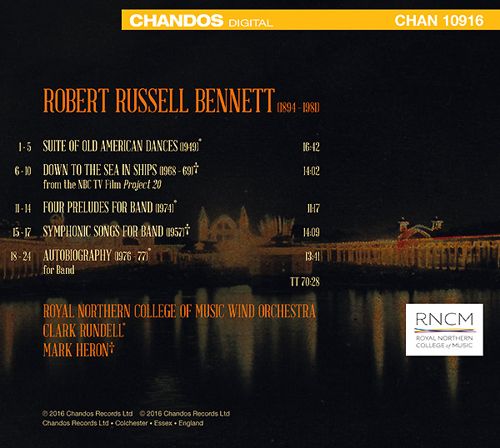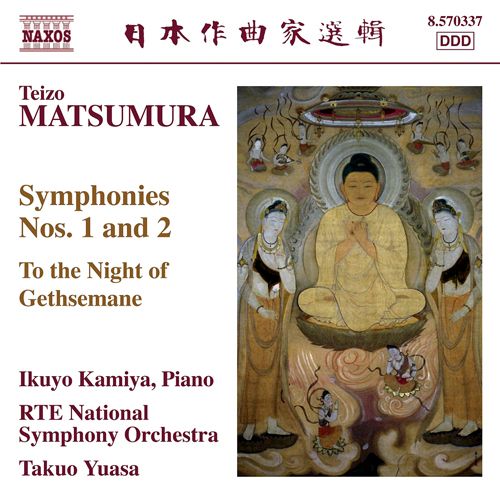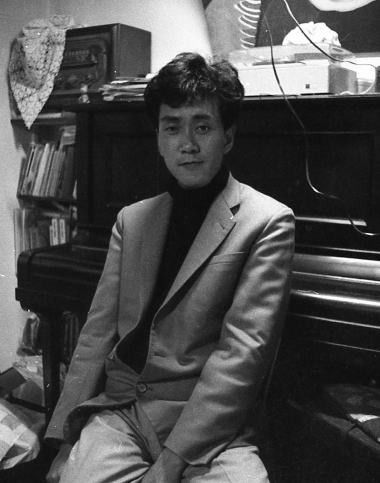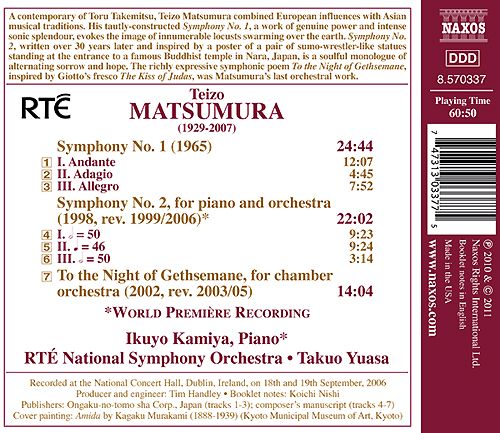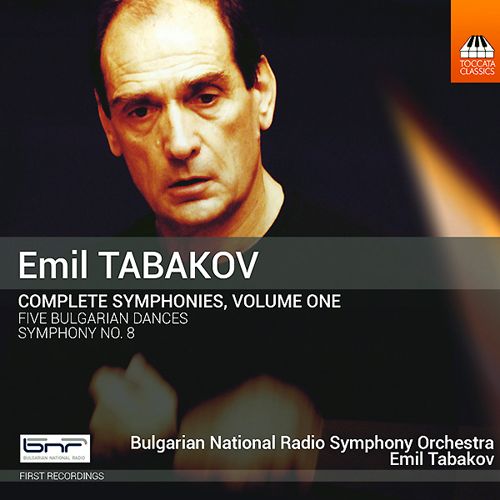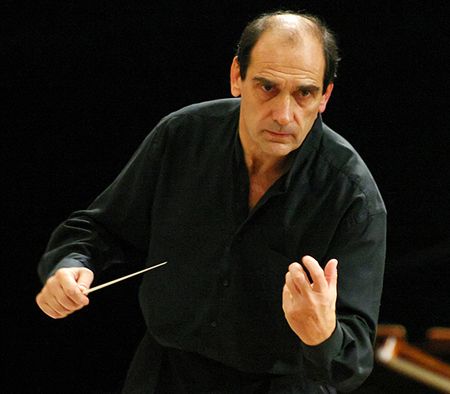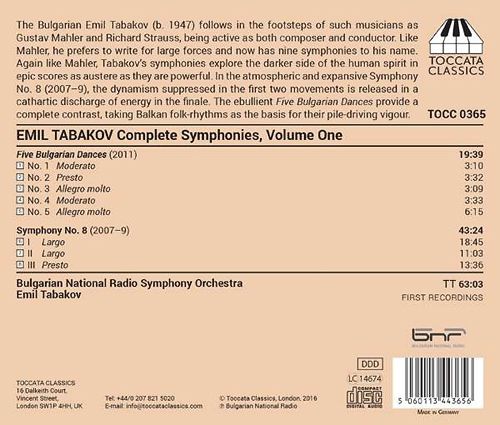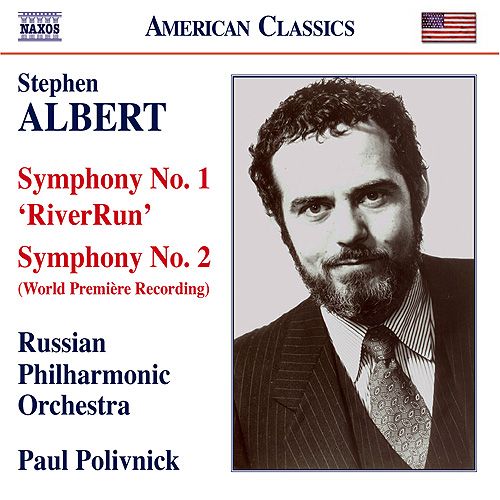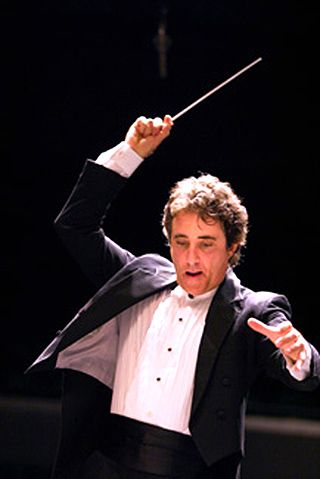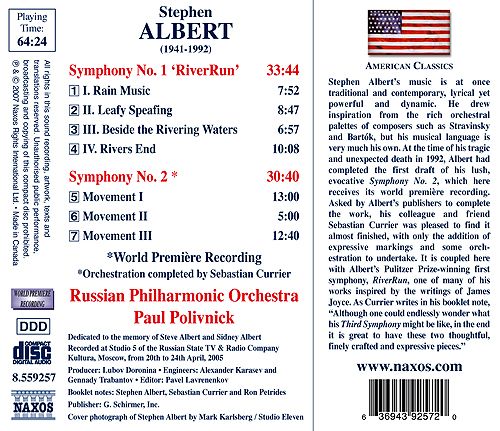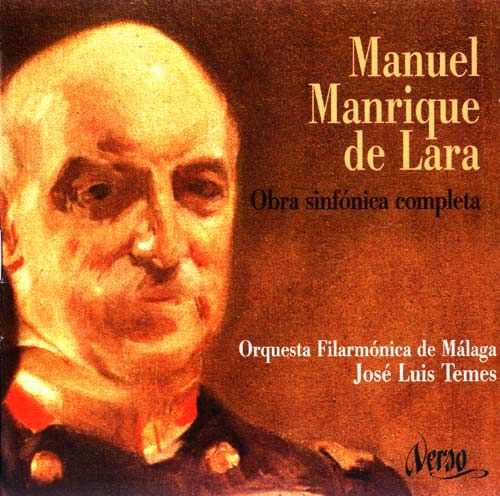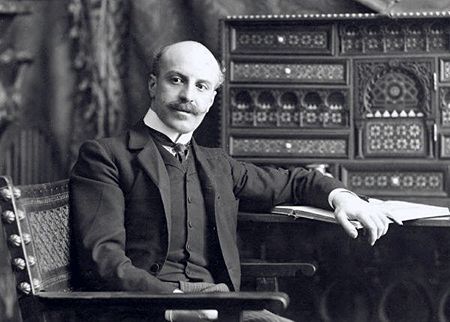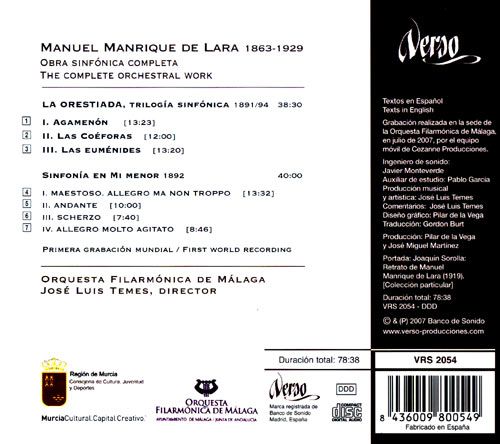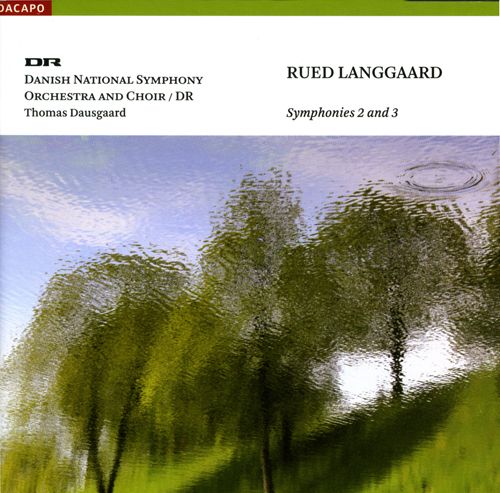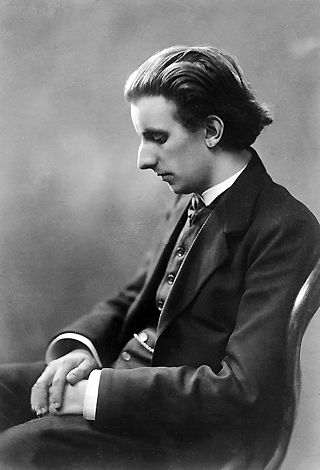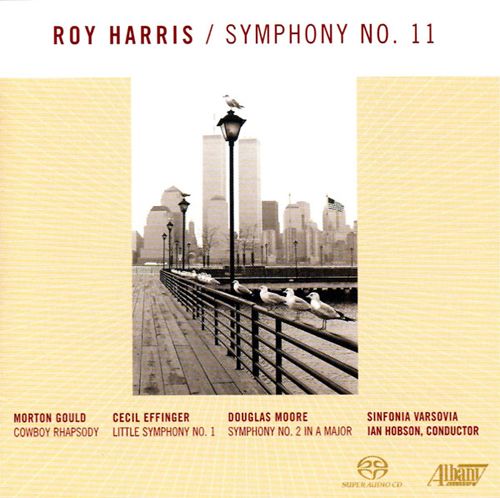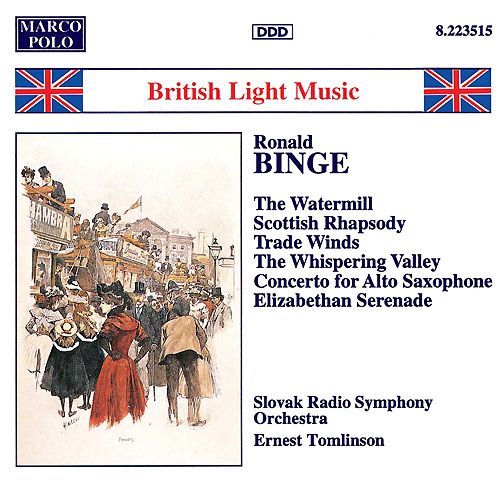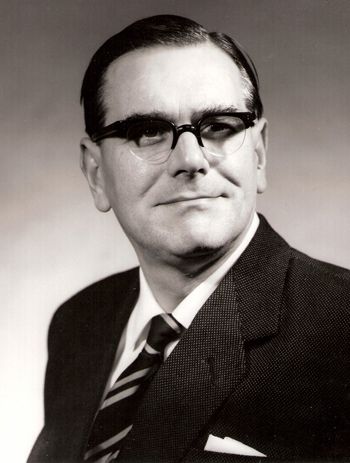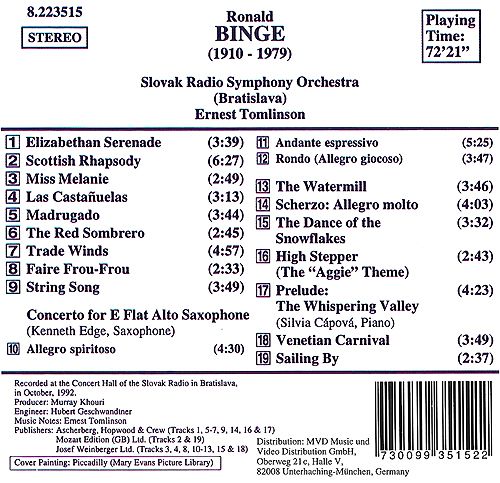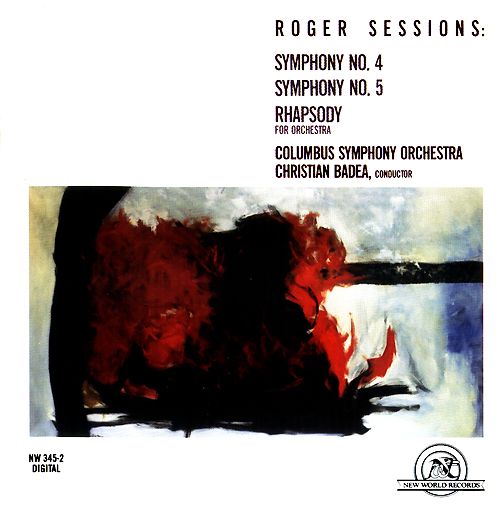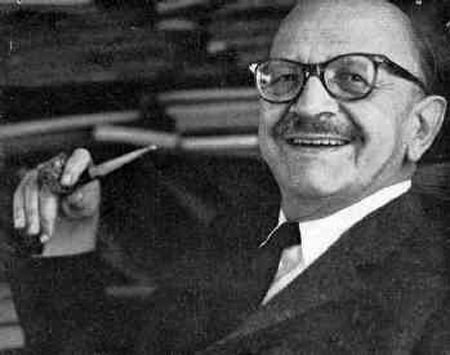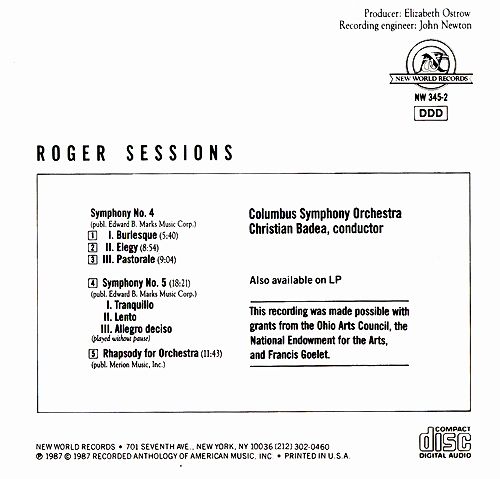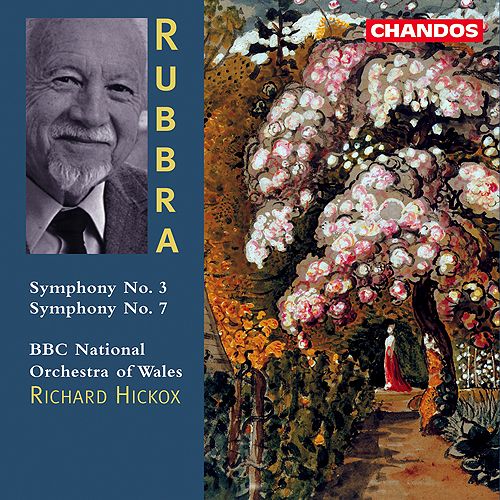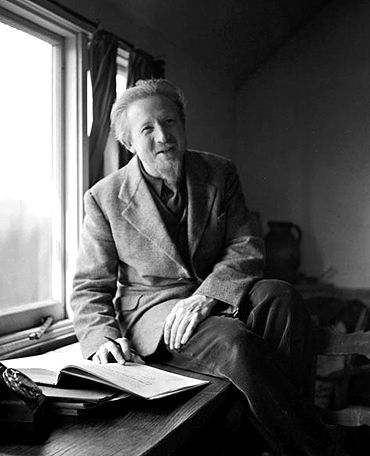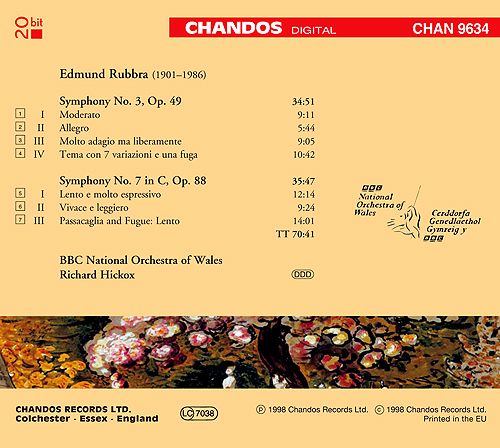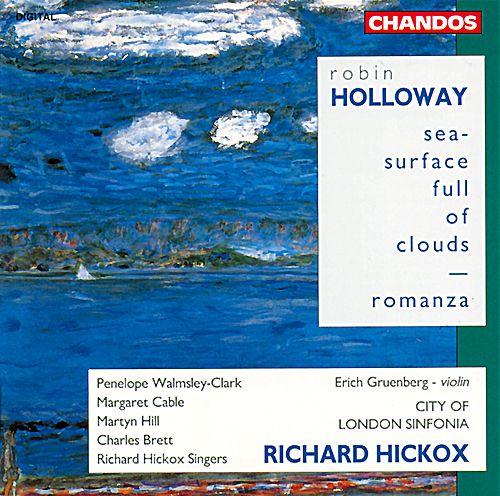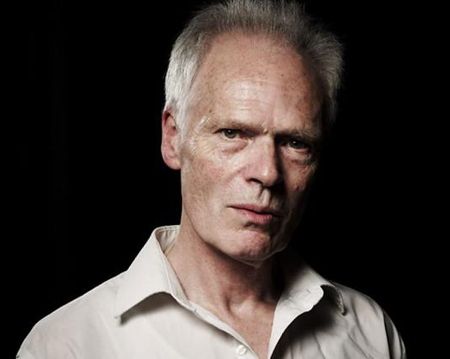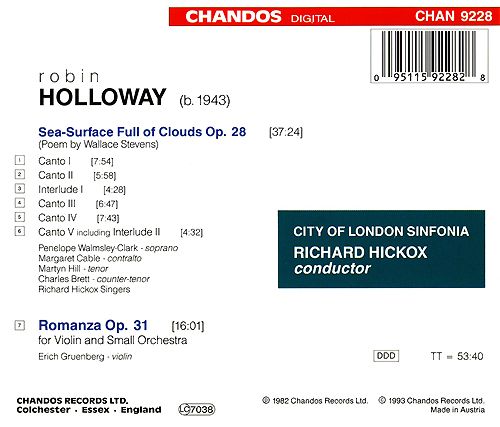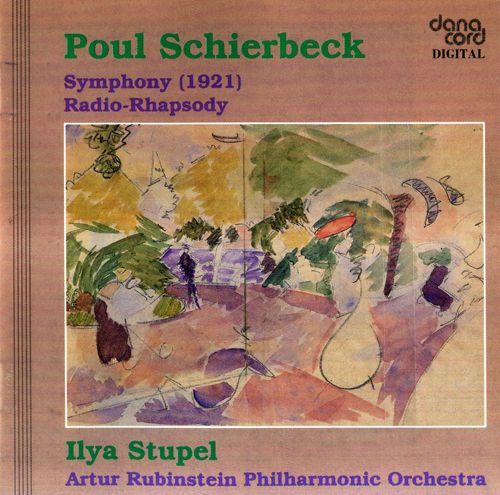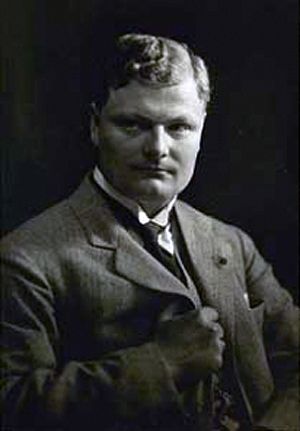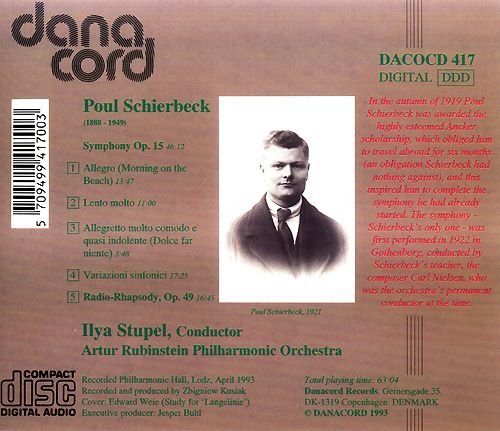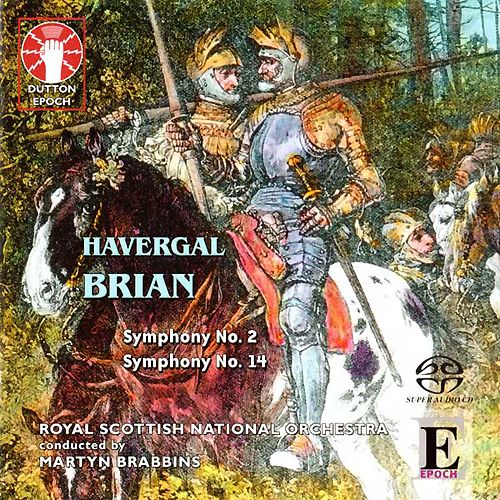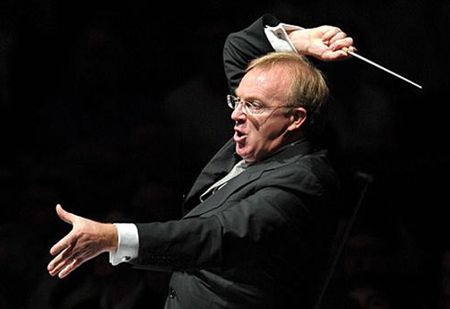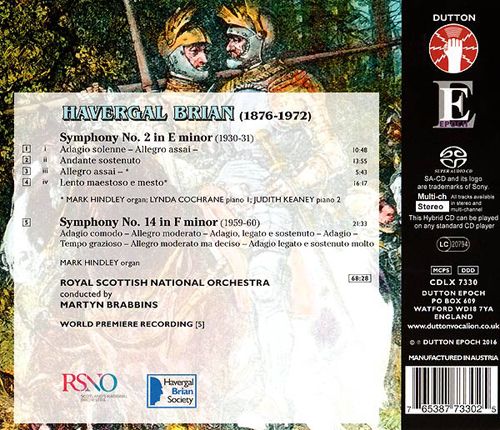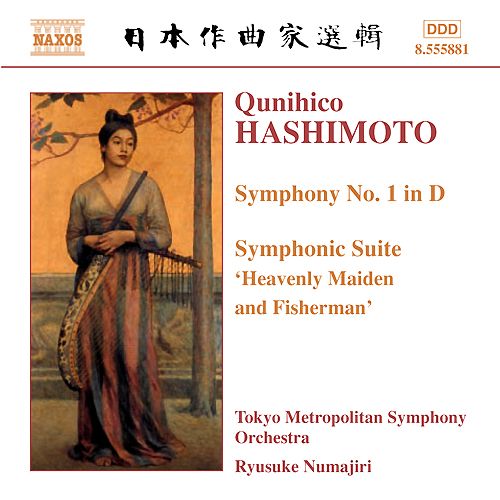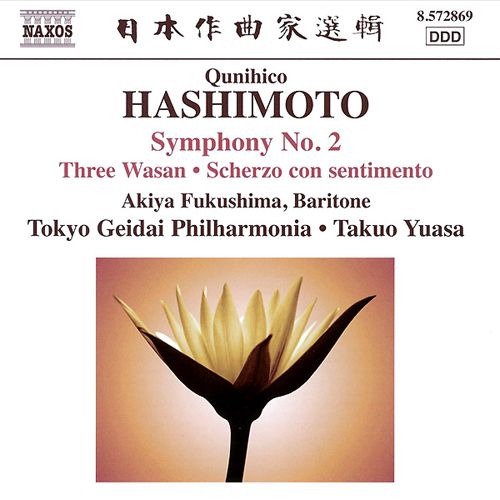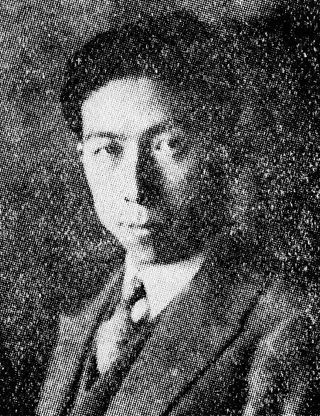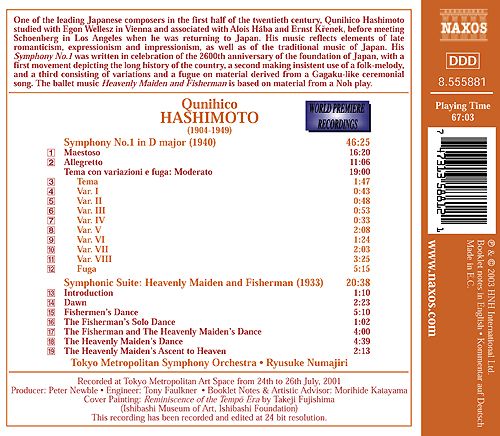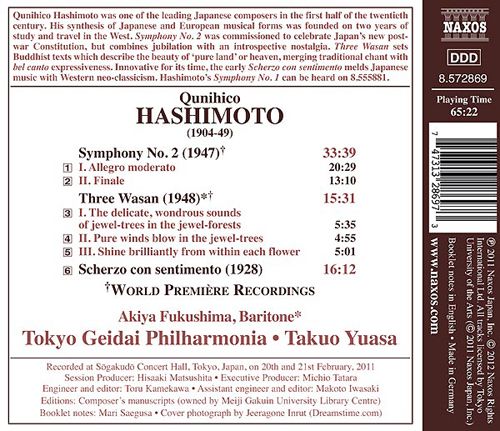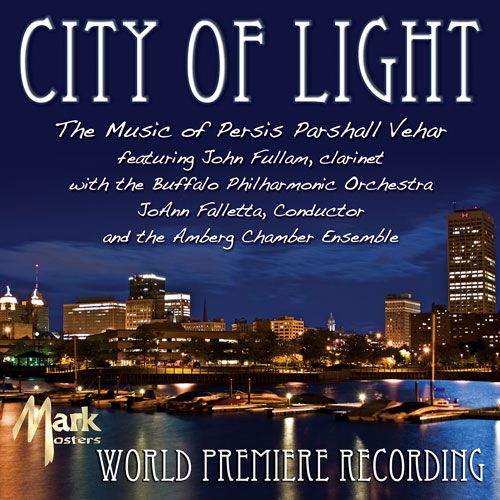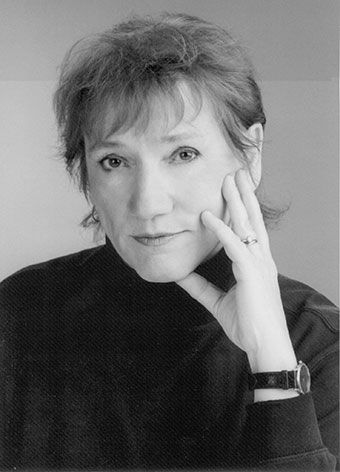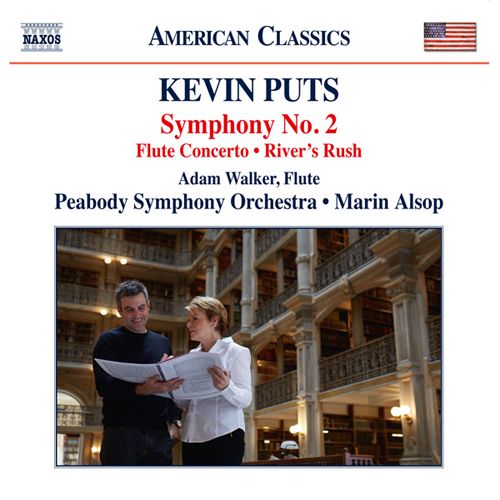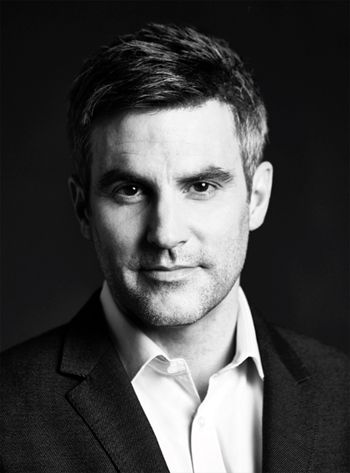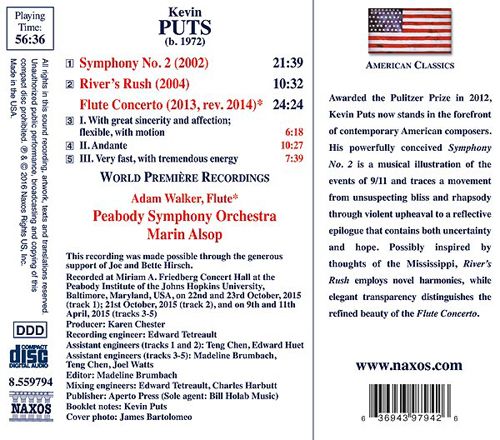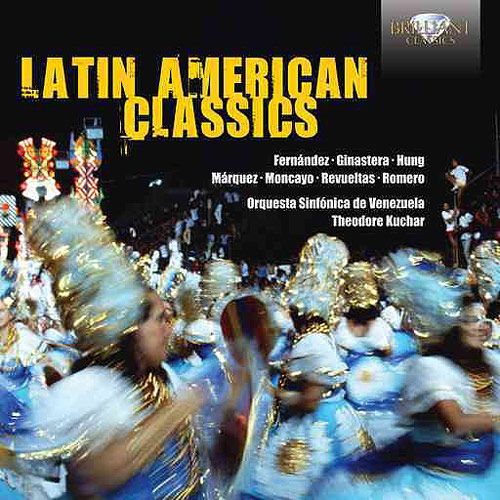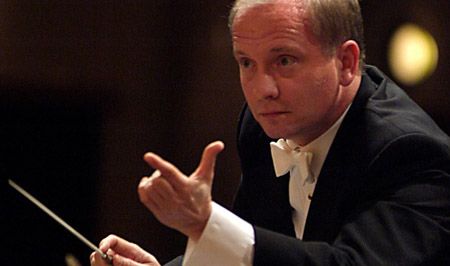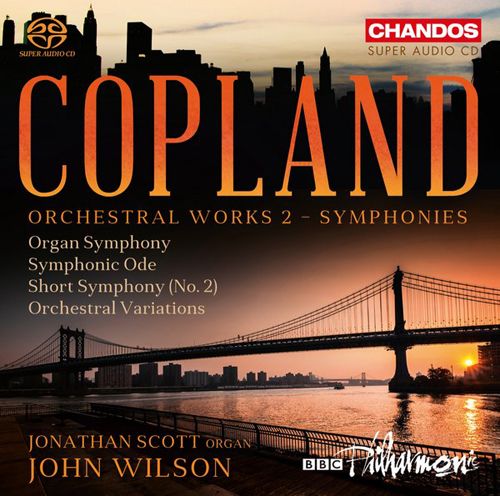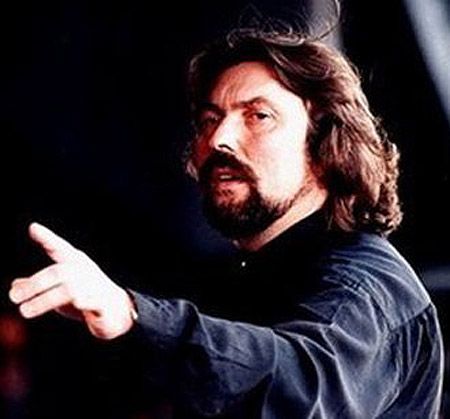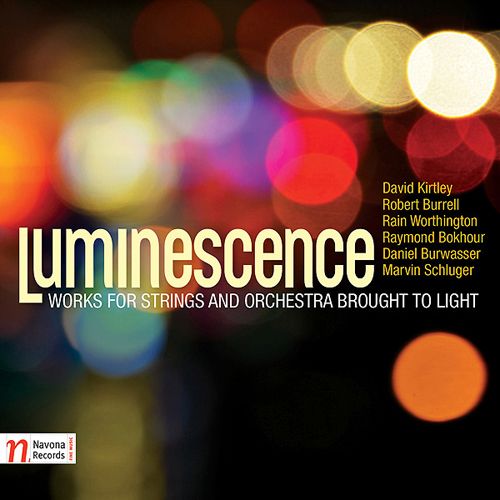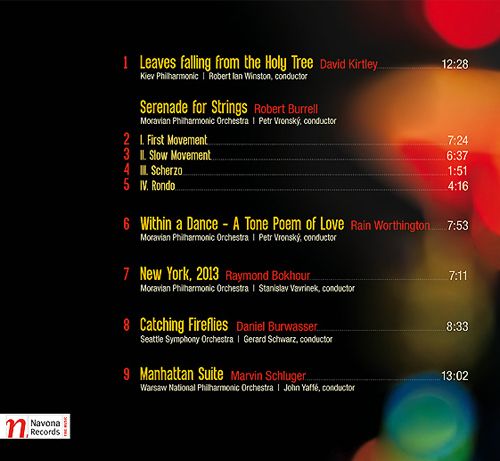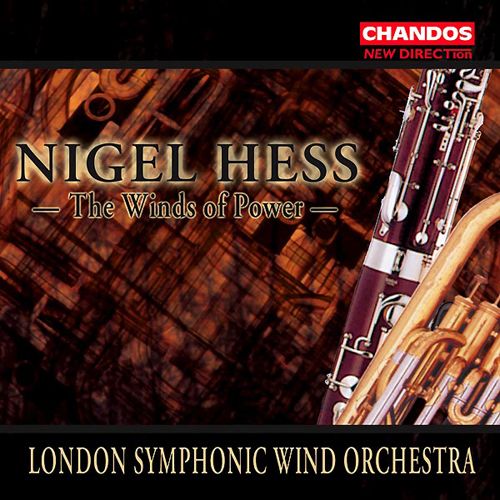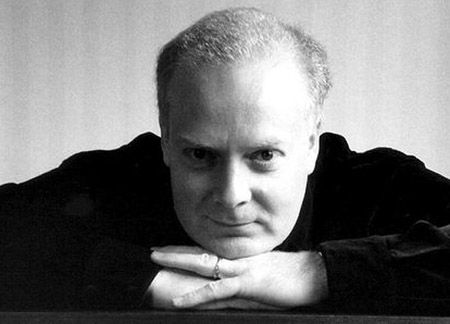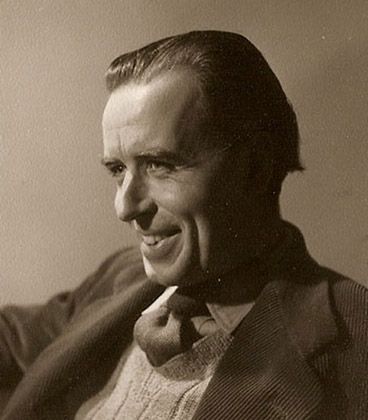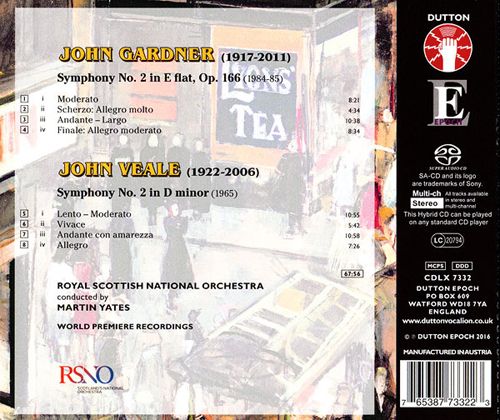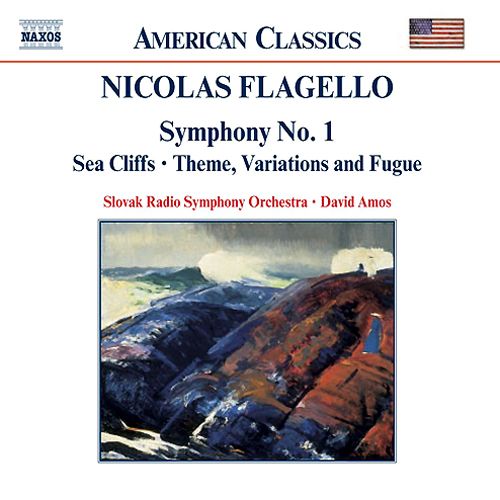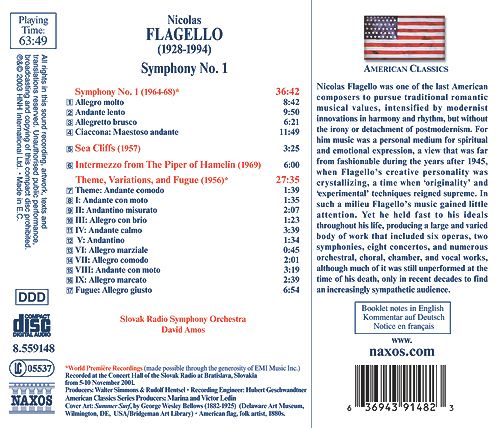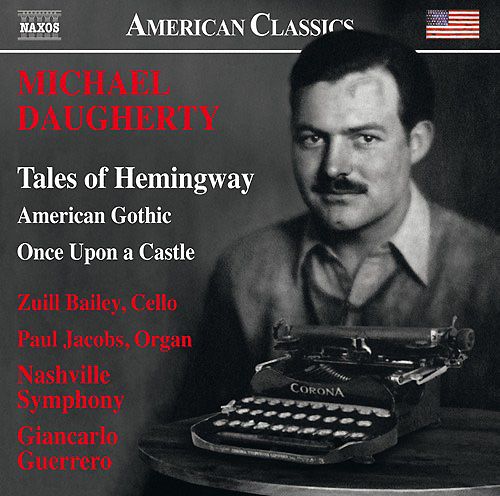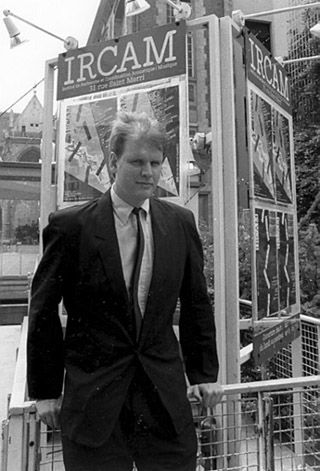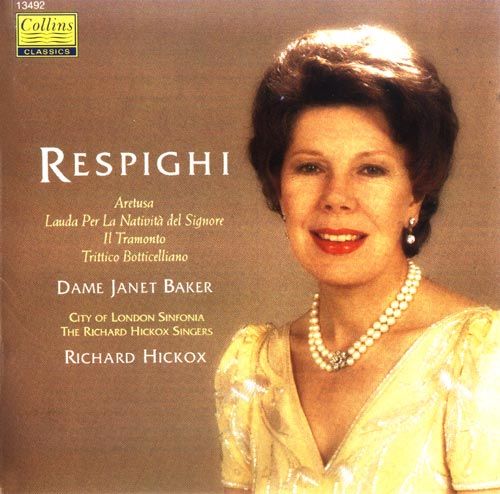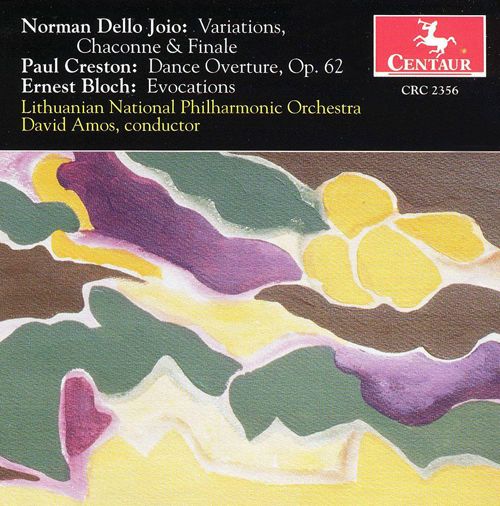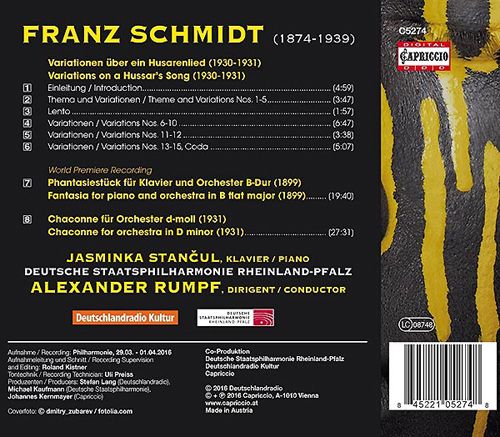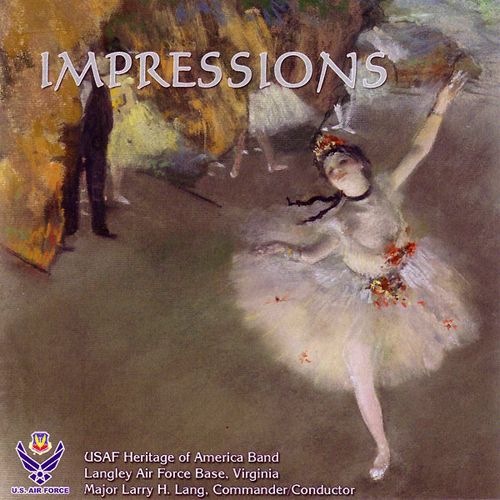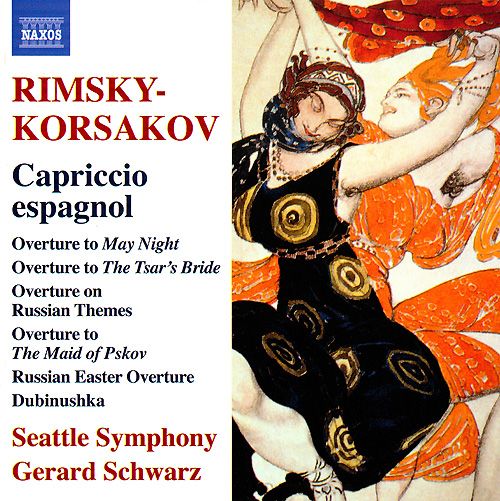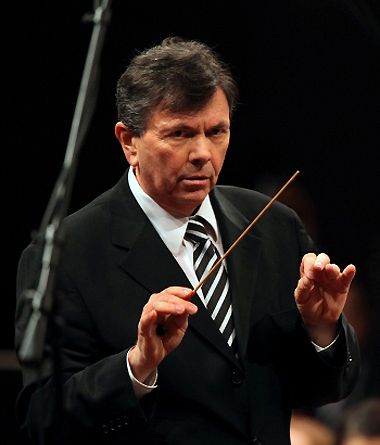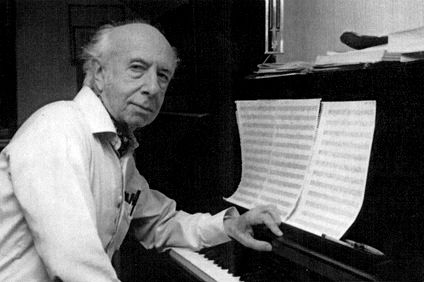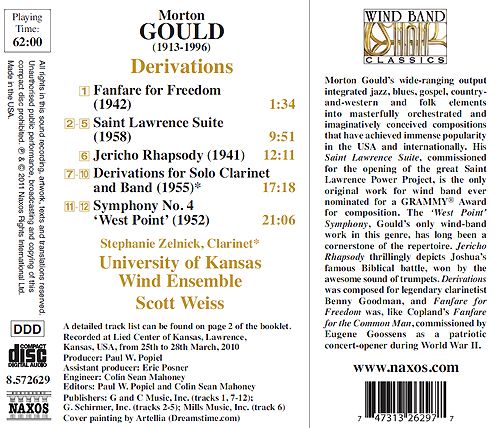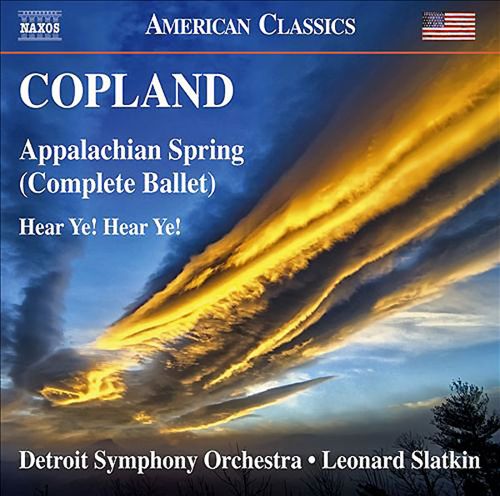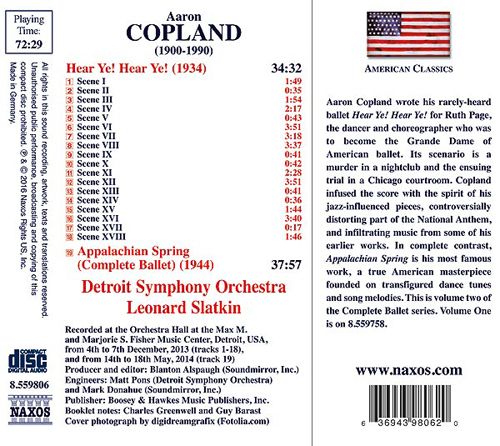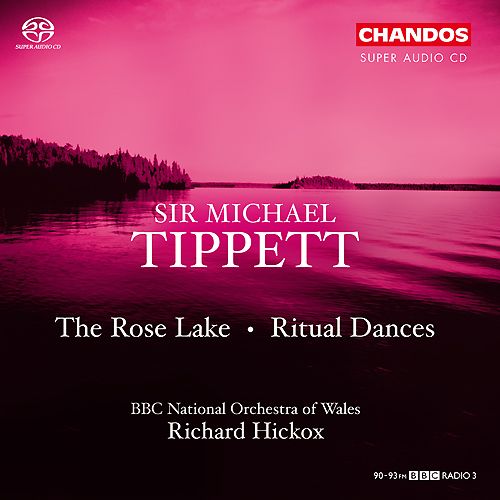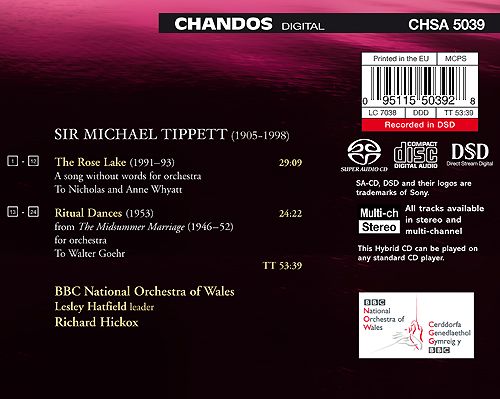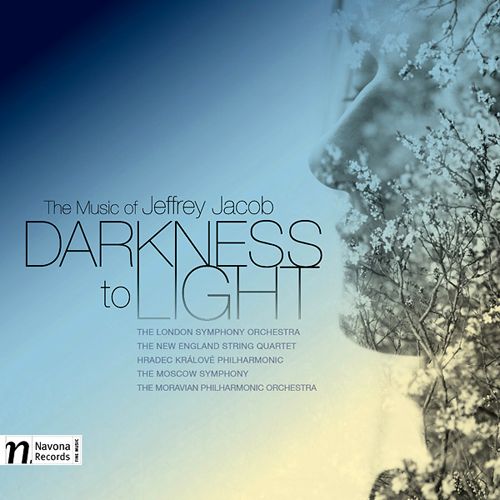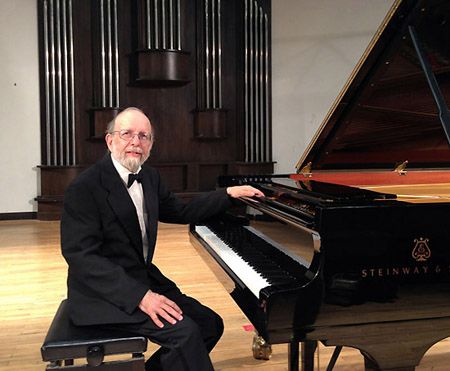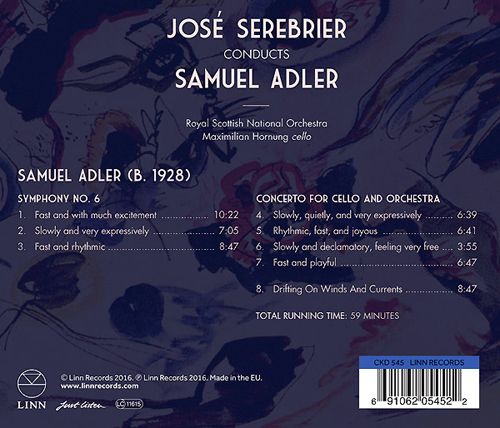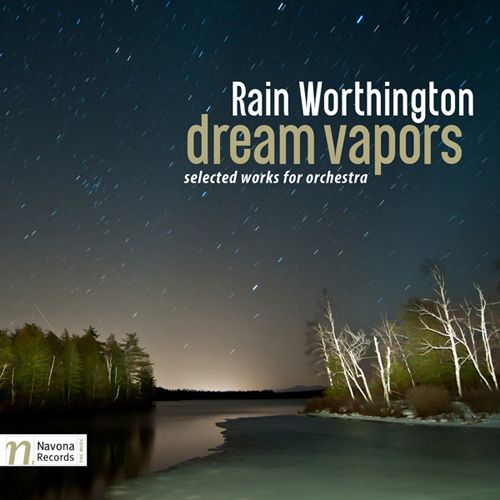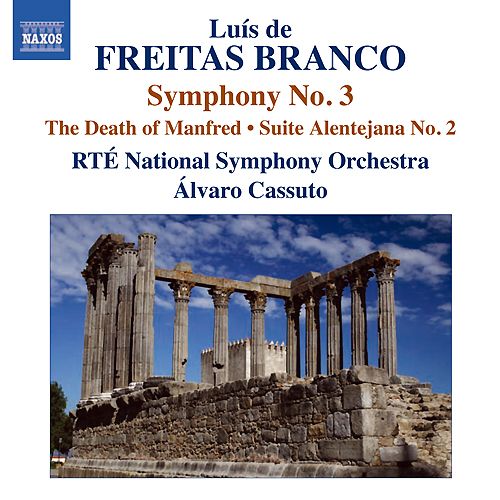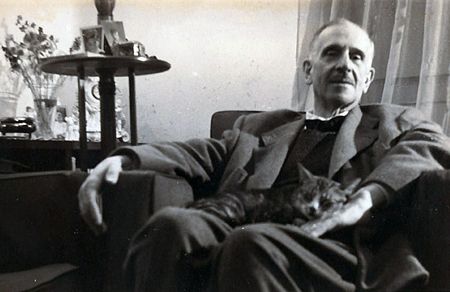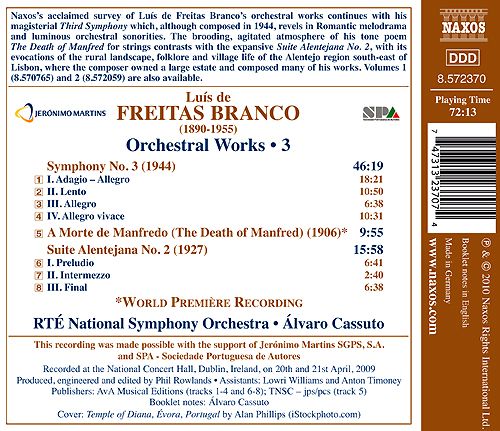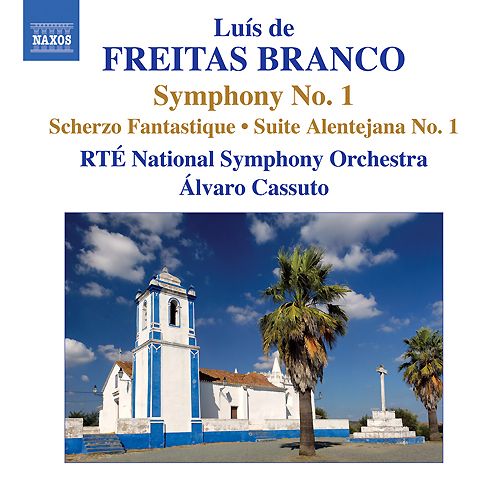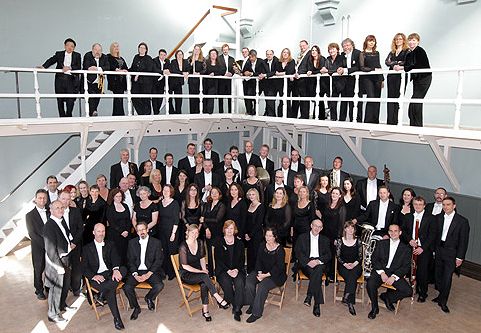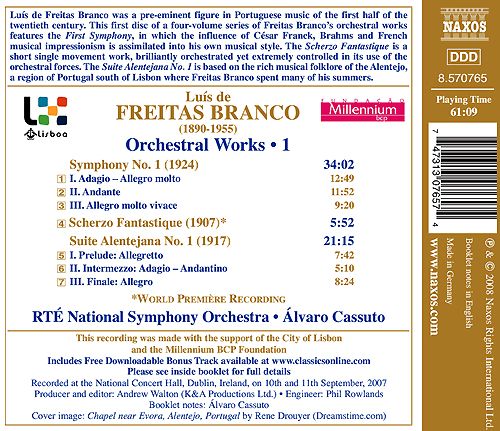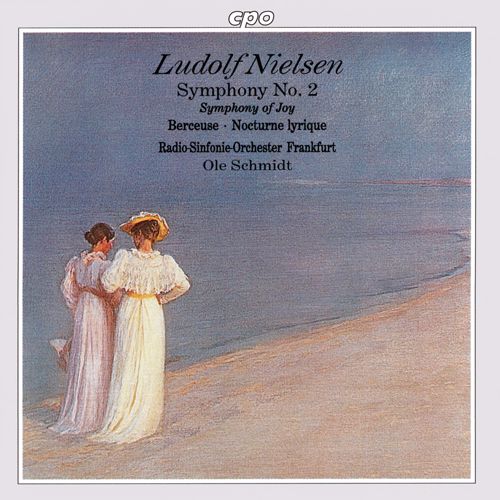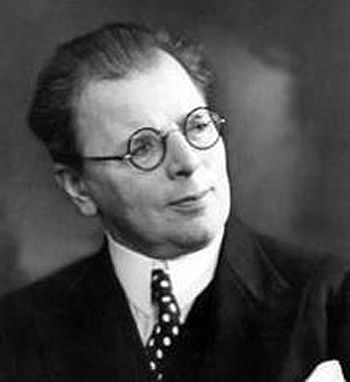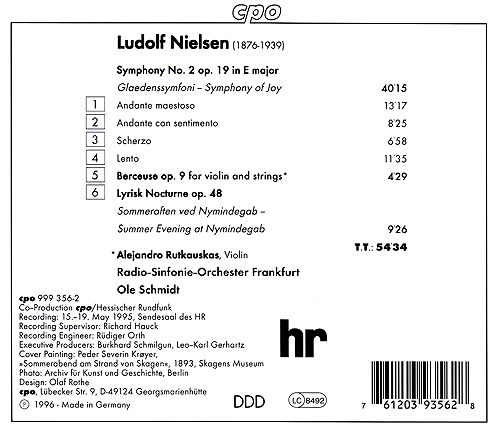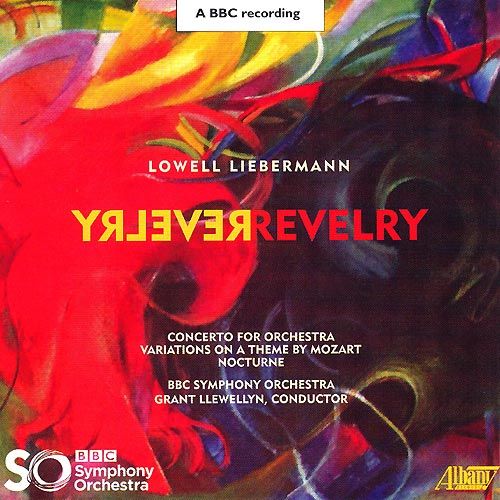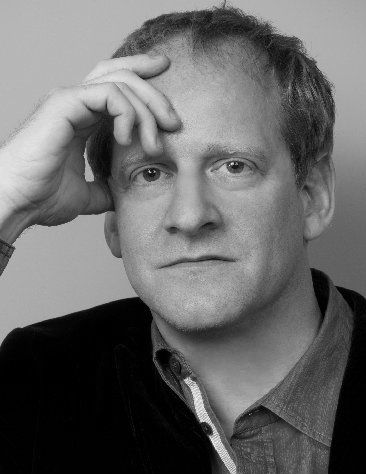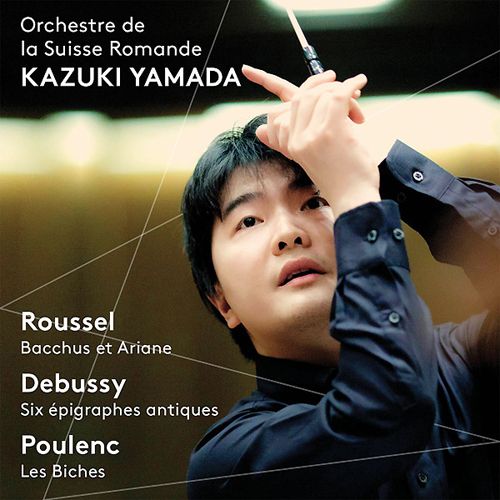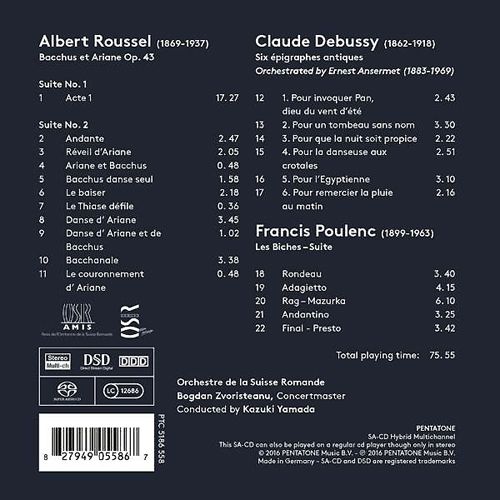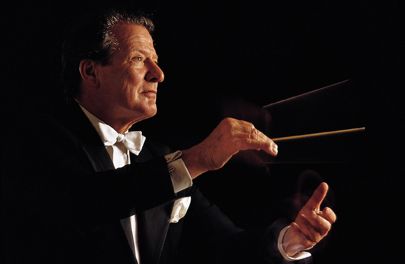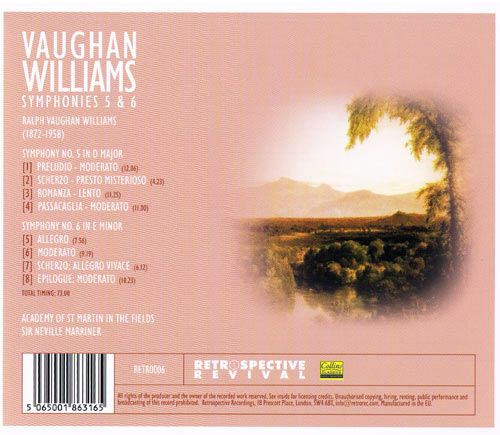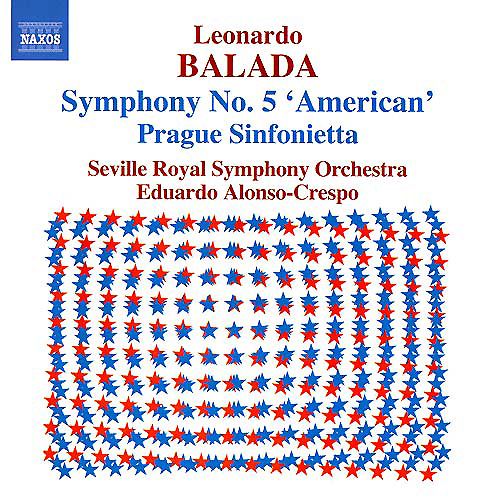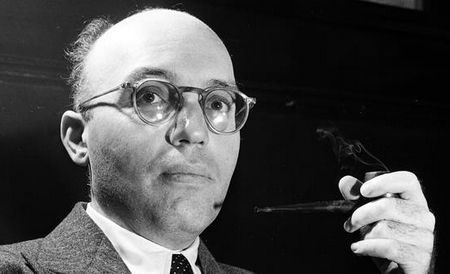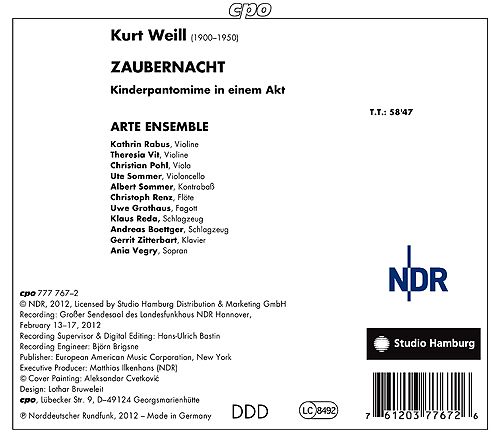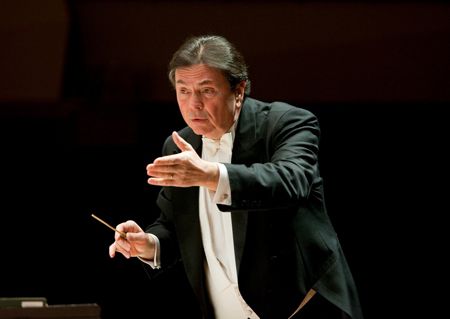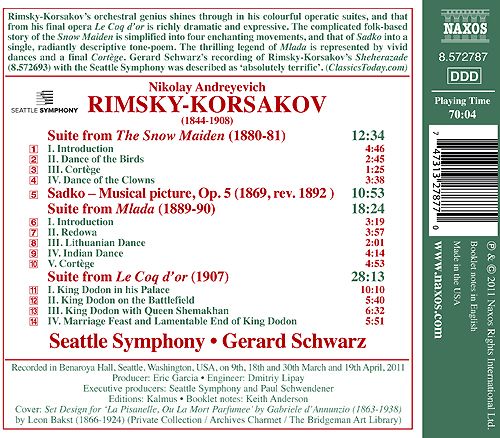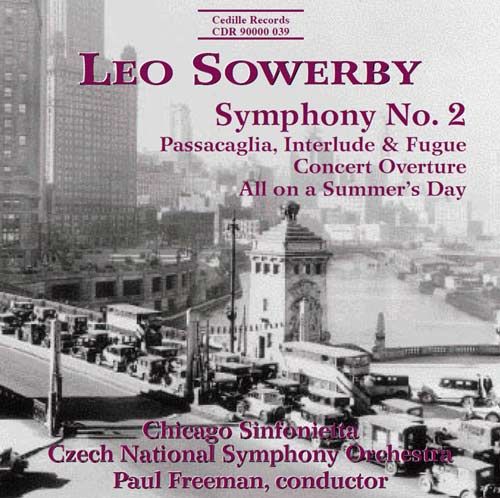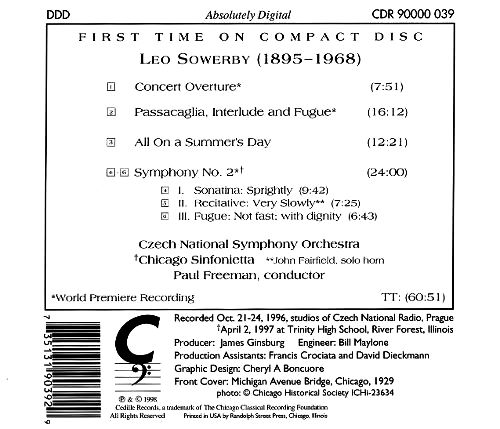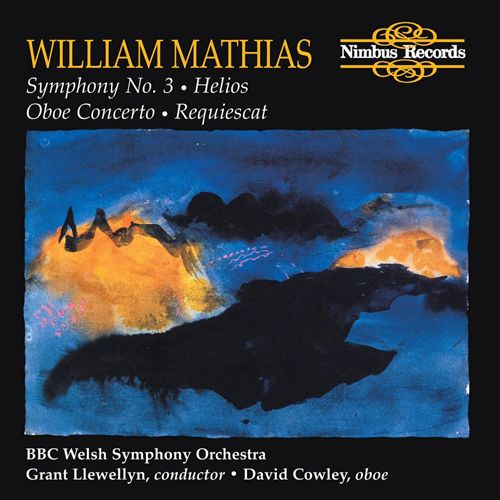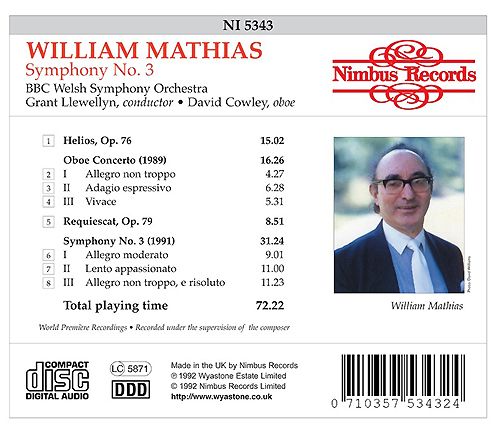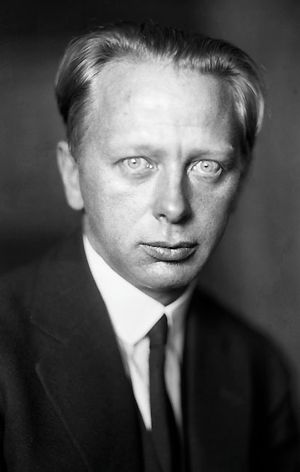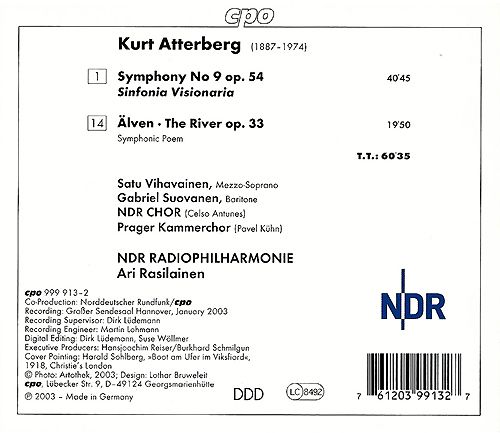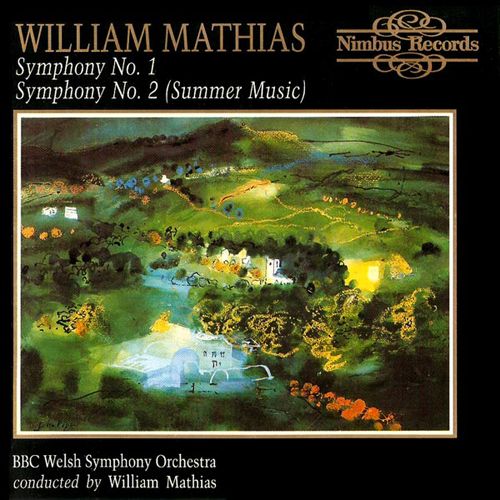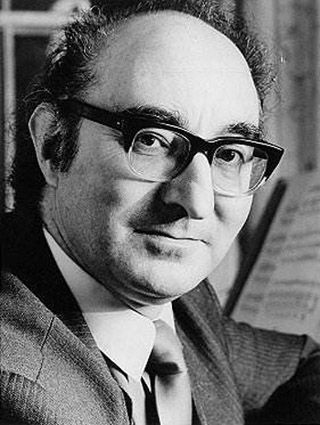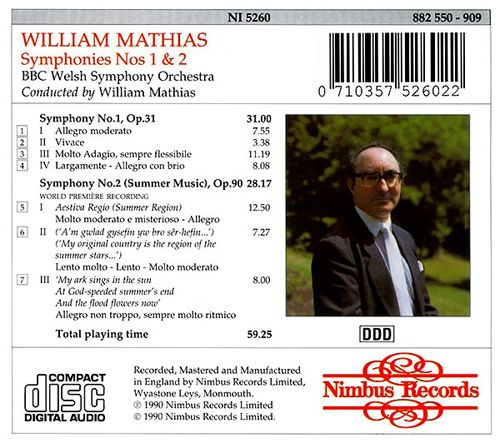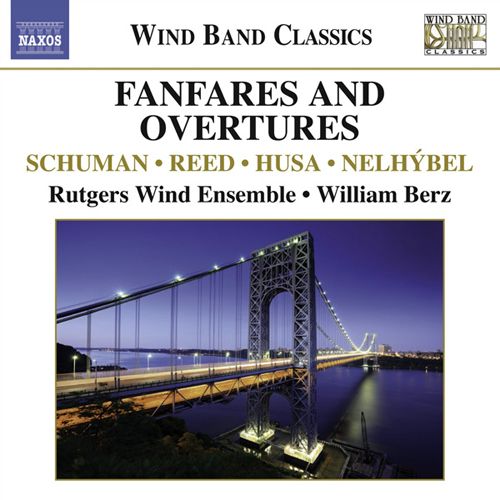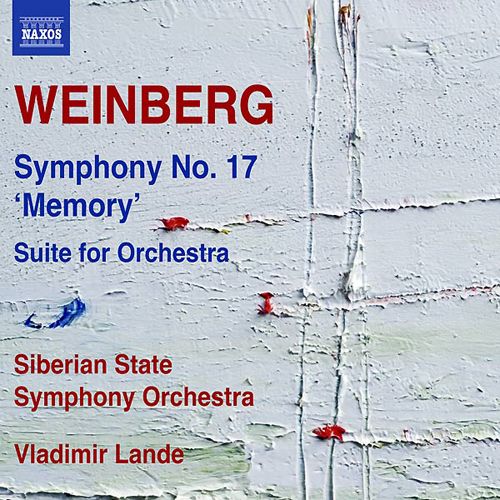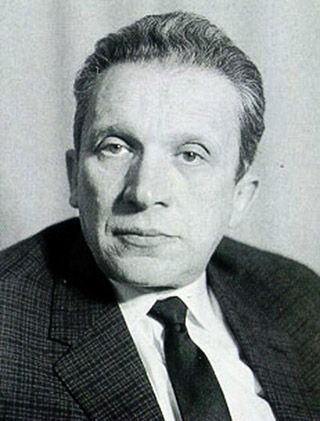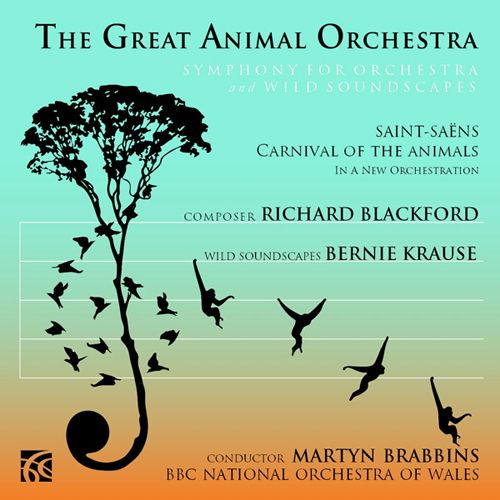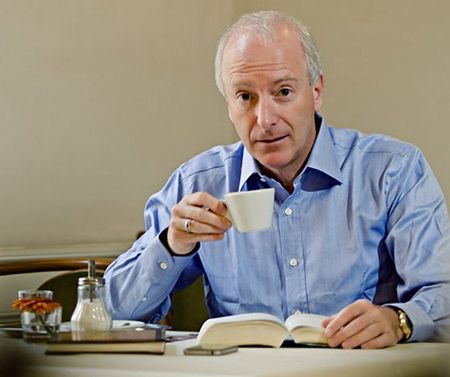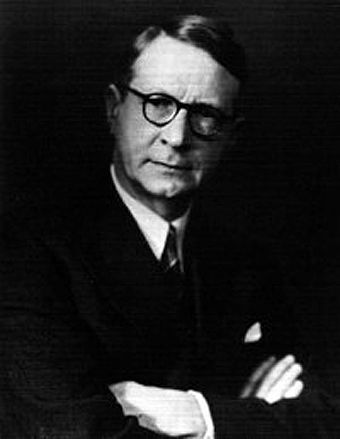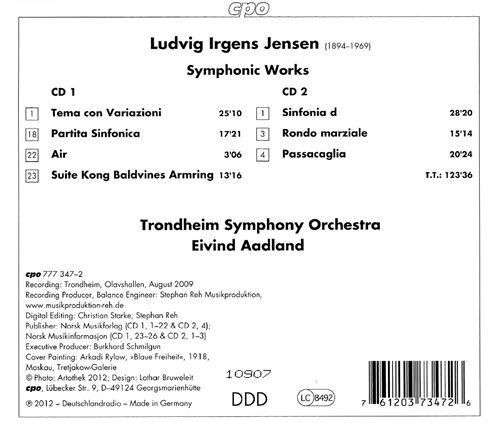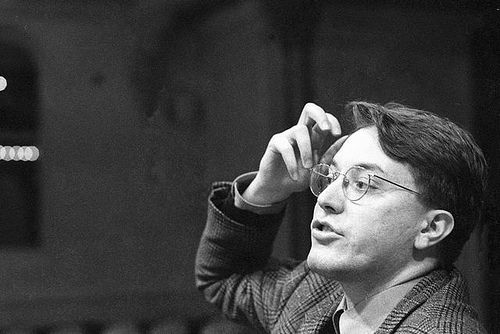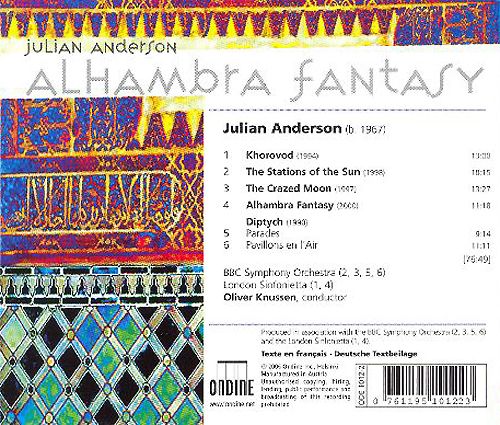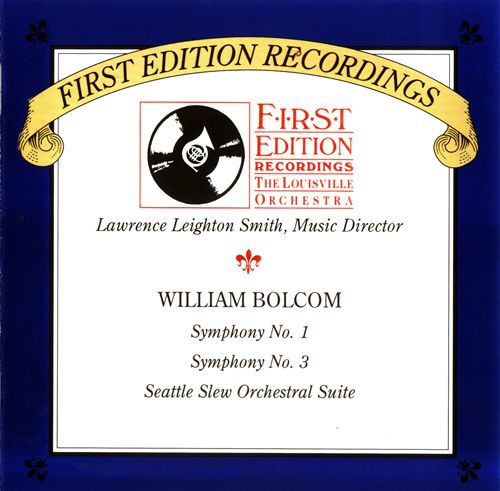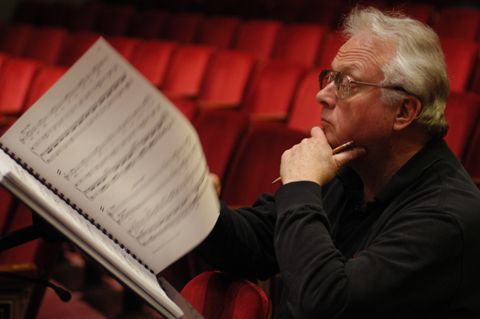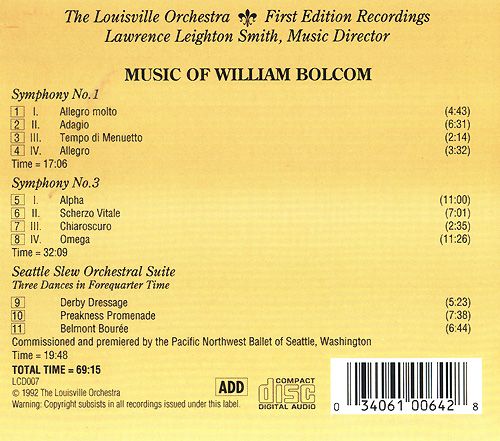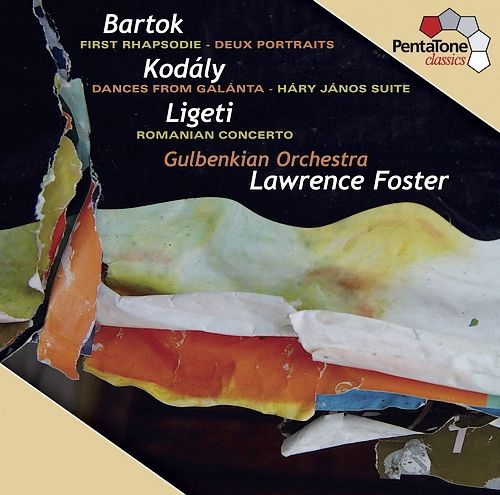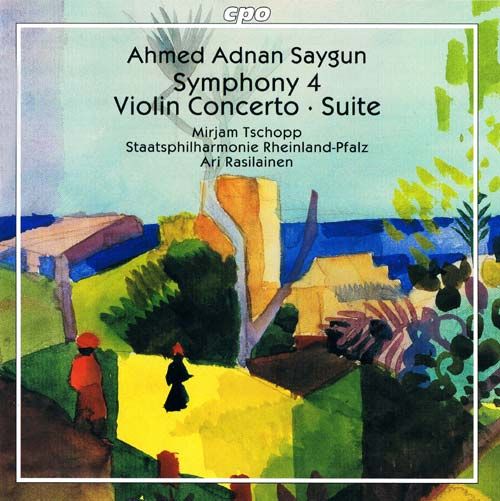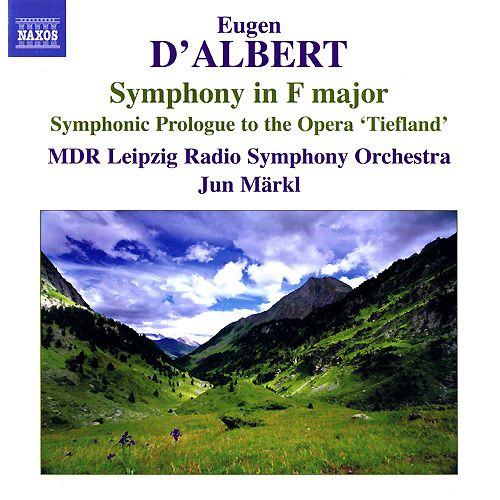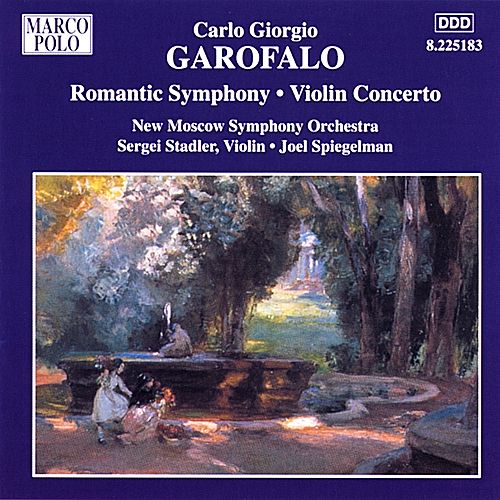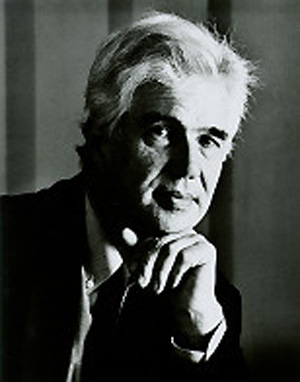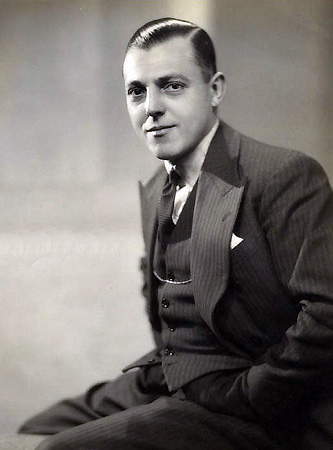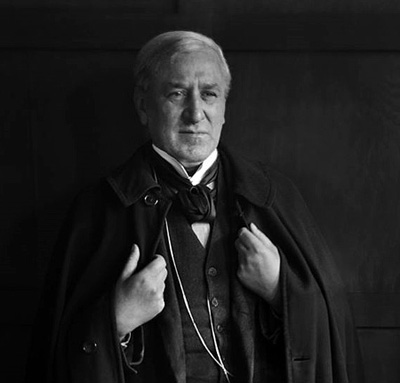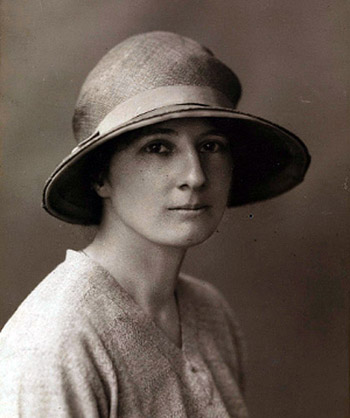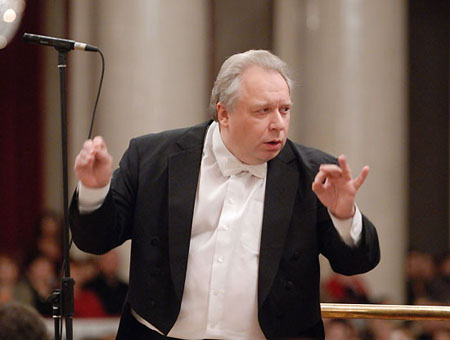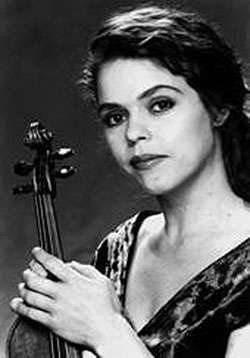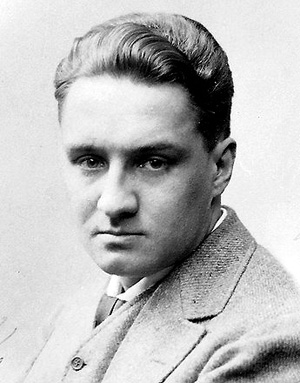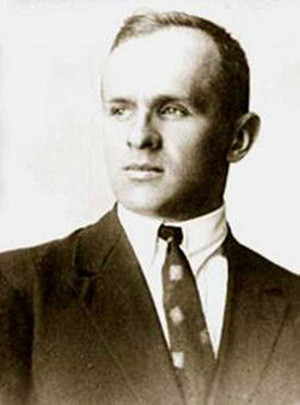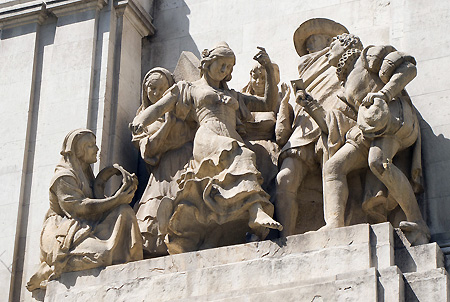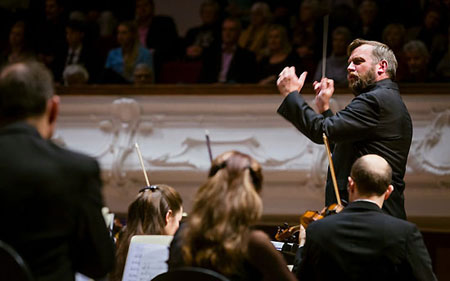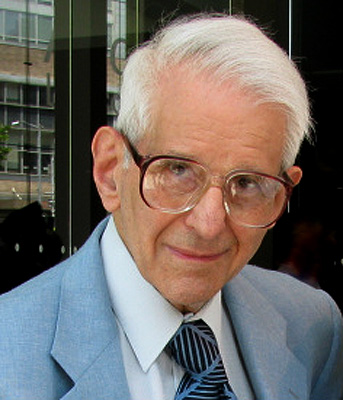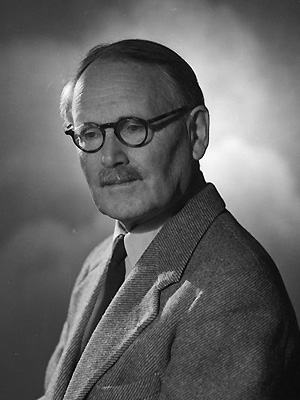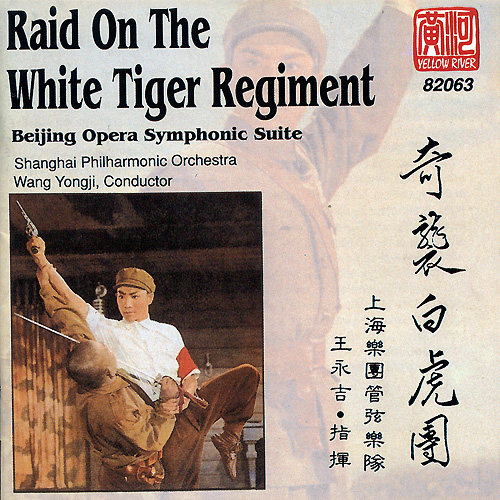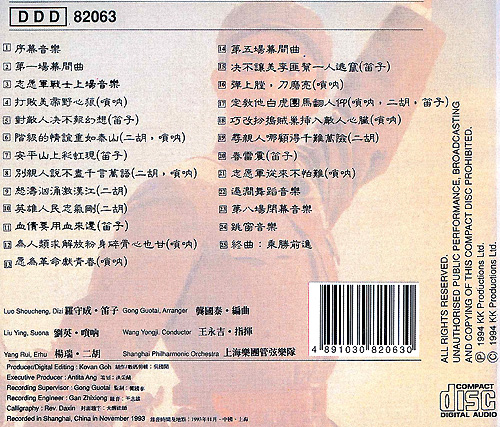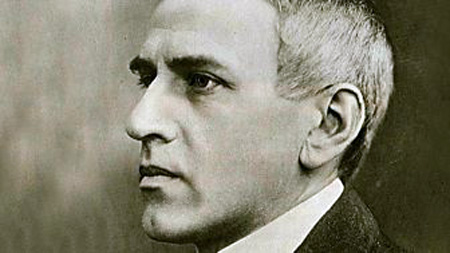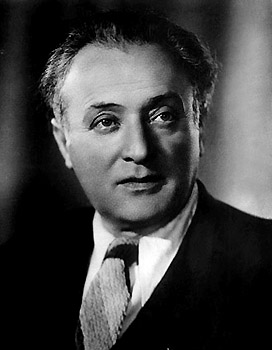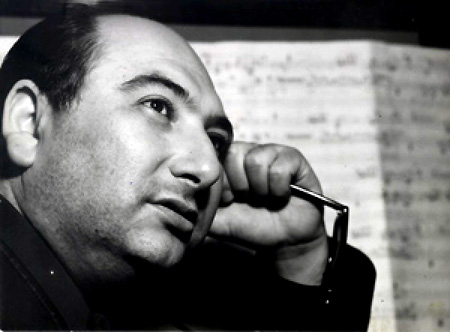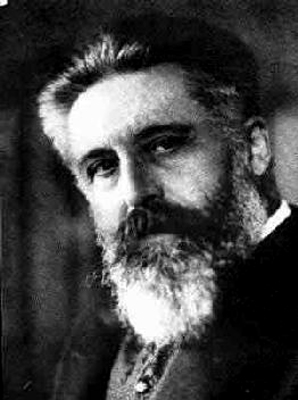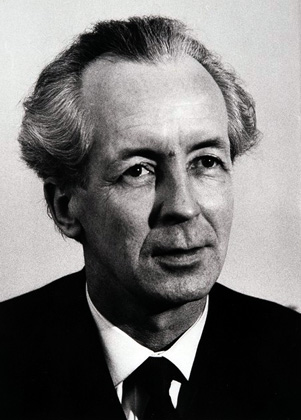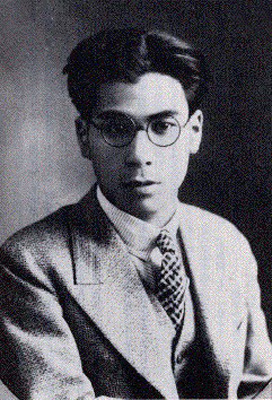Note: New uploads will be made "along the way",
so you’ll have to browse through the thread to pick up all the releases.
Suggestions for other discs/works or requests are are welcome as PM’s. Enjoy!
COMPLETE LIST OF ALL THE POSTS IN THIS THREAD (up to and including #1216)
Initial compilation by hg007bb, updated by me:
https://mega.nz/#!h4xXULyY!7x5eNAkTDYU7CkqWjsVsT-a-nfzR6GLZAa_uZm3Nbvg
This is in PDF format: You can click on the links from within your PDF reader (like Foxit PDF, etc).
Have fun!
Note: The later uploads are also available in FLAC(lossless), but only
by PM request and only for a limited time. Those marked with "FLAC Link expired" are still availble
in mp3, but requests for those in FLAC will not get a reply!
If you can’t see covers/photos, then it will be because you guys exhausted the bandwidth
with my free image server.
Because many of the original "depositfiles" links were dead (except where otherwise indicated),
I have re-upped the entire bunch to MEGA, and apart from the odd one that I may have missed they should
be up and downloadable for the foreseeable future. Everybody can use MEGA. Preferred browsers are Firefox 22+
(with a plugin the site asks you to install when you first open it), or CHROME 28.0+.
If you experience any problems with MEGA in Firefox (which sometimes occur after an update of the browser), try and
(re-)install the MEGA plugin for Firefox: https://addons.mozilla.org/de/firefox/addon/meganz/ – It always does the trick for me! 🙂
Have fun – and please click on "LIKE" if you downloaded
and enjoyed a release.
Please also note:
I have started a "Desert Island Discs" thread for everyone who loves classical music to post/upload their 5 favorite albums:
Formats can be lossy (192kHz or better) or lossless. I’m hoping for a healthy response …
Please read this first:
Film music (the symphonic "background variety" at least), as most discerning listeners would know, is more or less
a sub-genre/deviation (and all-too-often, rip-off) of a type of concert music commonly referred to as "program music",
i.e. music that seeks to depict a certain story, landscape or emotional state in musical terms. It originates in the 19th century,
invented by German-Hungarian composer Ferenc (Franz) Liszt. He wrote a lot of so-called "symphonic poems",
of which the most famous are Les Pr???ludes, Tasso, Mazeppa, and Prometheus. While most of his orchestral works are
rather dreadful, they helped to usher in a new phase of story-related music, which was the antithesis of the purported "absolute music",
aka "classicist music" – which had been the norm before. It was, in fact, the very embodiment of the "romantic age" in music,
first attempts in which date back to Schumann and Mendelssohn. As literary scholars will know, "Romanticism" in literature goes back
to the end of the 18th century ("Gothic"), but then, music is always a step or two behind. Most people agree that if Richard Wagner
had lived into the 20th century, he would have been a film composer, too.
Long story short, this thread will be devoted to so-called "program music" – which could have been film music
had the circumstances been different. It can be tone poems, ballet music, radio scores, incidental music written for stage plays,
and so-called "program symphonies". I think that film music devotees should take a peek into the works I’ll be posting.
The uploads are meant for this forum, and this forum only! Please do not further share or upload them to other
boards/file sharing pages. This thread is supposed to spark your interest in certain composers and their work, and of course
concert music in general. Also, if you particularly like an album and want it in lossless, please consider buying it!
As a further perk, I won’t be posting "You all know it" stuff like Smetana’s "My Fatherland". I’m just that arrogant.
As a starter, please embrace this collection of Persian-themed orchestral poems by composer Behzad Ranjbaran.
No.1
"The Persian Trilogy"
Music Composed by Behzad Ranjbaran
Played by The London Symphony Orchestra
Conducted by JoAnn Falletta
[I]"Persian Trilogy is a collection of three orchestral works that were inspired by stories of Shahnameh,
the great Persian epic poem written by Ferdowsi (c. 940-c.1020). My artistic desire was to express
these dramatic and epic stories in a musical setting, using the color palette and power of the modern
symphony orchestra. The urge to compose these works was also fueled by my early fascination
with Persian legends and mythology, since I grew up in Tehran."
Download Link: https://mega.co.nz/#!aVUUSaIT!L76mDWAHn8NdaidJcmb1QCOVM4vyRSMygwc0DcY xocM
Source: Delos CD (My rip)
Format: mp3, 320k/s (CBR), DDD Stereo
File Size: 180 MB (incl. cover)
Enjoy! Don’t share! Buy the original!
And I think that if Mozart would have lived today he may have produced some astonishing works.
and his symphonic suite "The Sea" (De Zee) actually predates Debussy’s famous triptych.
Unlike Debussy, Gilson is more influenced here by Russian late 19th century romanticism.
It’s an engaging piece, coupled to some other of his orchestral works. Very fine recordings indeed.
No.2
"The Sea" (De Zee/La Mer) and other works
Music Composed by Paul Gilson
Played by The Flemish Radio Orchestra
Conducted by Martyn Brabbins
"Belgian composer Paul Gilson is a missing link in French literature, a key transitional figure between French post-romanticism, as exemplified by Vincent d’Indy, and impressionism, a trend espoused in terms of style by Claude Debussy, though he hated the term. Proud owner of the 1889 Belgian Prix de Rome for his cantata Sina???l, Gilson managed to win this distinction despite the fact that he was an autodidact, and in a long career that lasted until World War II, Gilson produced more than 500 compositions. His work, however, remains practically unknown outside of Belgium, where his symphonic poem La mer (1892) has never dropped out of the concert repertory; during Gilson’s lifetime it was heard everywhere. This Klara disc, co-branded with Dutch label Etcetera, contains that work, an Andante & Scherzo for cello and orchestra, and a charming ballet suite drawn from La Captive (1900).
The Klara disc features Martyn Brabbins and the Flemish Radio Orchestra and Chorus, and this is only the third time in the CD era that Gilson’s La mer has been recorded; earlier readings were on the Discover International and Marco Polo labels. While both have their merits and faults, neither of the earlier recordings has the terrific sound of the Klara release, recorded in 2006. Brabbins clearly likes this music, and there isn’t any reason why a conductor shouldn’t, for Gilson exploits strong melodic themes and molds them through a widescreen, Technicolor orchestration. While the music of Wagner was an inescapable influence on d’Indy, Gilson, and Debussy, the further example of Rimsky-Korsakov and the Russians affected only the latter two. This is felt more strongly in the music for The Captive than in La mer. The "Chants et danses de matelots" is squarely in the camp of d’Indy and other late French romantics, a style forgotten outside of France apart from some works of Franck, Lalo, Chabrier, and Chausson. However, the final movement, "La Temp???te," looks forward rather than backward.
Many advanced classical listeners reach a point where one might think they have exhausted the reservoir of the best romantic orchestral symphonies. While the jury is still out on the value of Gilson’s repertoire as a whole — there is so much that it will take a long time to achieve a true understanding of it — La mer is one major romantic work that is more than good enough to satisfy those who wonder "What’s next?" Moreover, this Klara recording under Brabbins jumps to the top of what is yet a very small heap." (All Music)
Source: Klara CD (my rip!)
Format: mp3, 320k/s (CBR), DDD Stereo
File Size: 157 MB
Download Link (re-up) – https://mega.co.nz/#!Mg1mBaKa!OHMy_0cU3_5MOy7JBOQkjEseft0ubT65NlPAnxX US9I
Enjoy! Don’t share! 😉
No.3
The cultural climate and economic situation in post-1949 China did no exactly invite new classical music composition
on any larger scale, and there are relatively few substantial symphonic works from the Mao era that suvive.
One of the grandest, in design at least, is Ding Shan-De’s epic program symphony The Long March, which,
as the title implies, deals with the fight against and ultimate triumph of the Red Army under Mao and Zhou Enlai
over Chiang Kaishek’s Kuomintang [Recent studies indicate that the march was far less heroic and triumphant than
what the Chinese Communist Party had lead people to believe, and that indeed the whole affair may have been
a fabrication of sorts]. Rather than delivering an all-out propaganda piece of marching tunes, Ding opted for a
musical journey that illustrates the path that the Red Army took by using folk melodies of the different peoples
whose lands the army went through. So there’s a plethora of attractive pentatonic themes, some of them
intensely lyrical – which has lead some conductors to gloss over and santinize the more rugged aspects in the work.
Which is why I have chosen a recording that is more dramatic and direct, if probably not the best-played.
The musical language is a mix of late romantic Russian music with some aspects of 20th century technique
that Ding picked up from his studies with Nadia Boulanger in Paris. Think: Shostakovich without the sarcasm,
or a Chinese Khachaturian.
"The Long March Symphony"
Music Composed by Ding Shan-De
Played by The Russian Philharmonic Orchestra
Conducted by Mak Ka-Lok
"The Chinese composer Ding Shande was born in 1911 in Kunshan, Jiangsu. In his childhood he took an interest in music and studied traditional Chinese instruments, including the pipa. In 1928 he entered the preparatory course of the Shanghai School of Music, where he studied the pipa under Zhu Ying. He later transferred to the piano department and attended the classes of the famous Russian teacher Borodin Zakharov. He have his graduation piano recital in 1935 and was appointed piano professor at Tianjin Women’s Normal College. After the outbreak of the War of Resistance against Japan, he returned to the Shanghai School of Music to teach the piano. He also set up the Shanghai Music Centre, of which he was director. In the 1940s he turned his attention to composition and in 1947 travelled to France, where he entered the Paris Conservatoire Nationale Superieur de Musique, studying conterpoint, fugue and other compositional techniques. At the same time he pursued advanced courses under Honegger and Nadia Boulanger. After graduation in 1949 he returned to shanghai to work at the School of Music, now the Shanghai Conservatory. There he has held the successive positions of Dean of the Composition Department and Vice-President of the Conservatory. He has served as a jury member of various international piano competitions and attended many international academic conferences on music. In the mid-1980s he resigned his administrative position, but remains Vice-Chairman of the China Musicians’ Association and Honorary Chairman of the Shanghai Musicians’ Association. He died in 1995. His important compositions include Long March, New China Symphonic Suite, Spring Symphonic Poem, Symphonic Overture, Piano Concerto in B flat major, String Quartet in E minor, Piano Trio in C major, the cantata Ode to the Huangpu River, a large number of piano pieces, including Variations on Themes of Chinese Folk-songs, a children’s piano suite Happy Festival, Xinjiang Dances Nos. 1 and 2, and art-songs such as Blue Mist, My Husband gives Me a Sunflower, Ode to Orange. He has also written theoretical works, including Exploration of Compositional Technique."
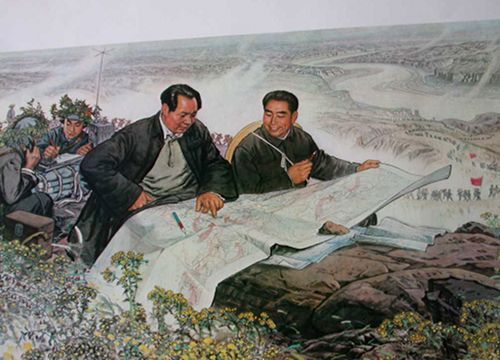
Mao Zedong and Zhou Enlai are having a picnic during The Long March. 😉
Source: Hugo CD (my rip!)
Format: mp3, 320k/s, DDD Stereo
File Size: 159 MB
Download Link (re-up): https://mega.co.nz/#!BkNH3YrI!Mje5bAxr06PMDn1OmY7qWHhEiyh-olO4s5baDg1IoS4
Enjoy! Don’t share! Buy the original! 🙂
And I think that if Mozart would have lived today he may have produced some astonishing works.
The Symphonie fantastique is indeed an early example of program music, as is, to a lesser extent, Beethoven’s Pastoral Symphony. But the move away proper from "abstract" music towards programmatic works in any systematic way truly begins with Liszt, and leads to the splendor of Richard Strauss and the music of Sibelius etc.
Let’s move away from politics for a bit and get to a composer whose career flourished under Mussolini. 🙂
No, I’m not suggesting that you don’t know who Ottorino Respighi (1879-1936) was, or that his most popular work
is a trilogy of symphonic poems (each, in turn, divided into four sections) about the grandeur of Rome.
Still, the Roman Trilogy (consisting of The Pines of Rome, The Fountains of Rome and Roman Festivals) is
such a magnificent example of program music that I cannot ignore it even if most people will already have one or more
recordings in their collection. Respighi, a student of Nikolai Rimsky-Korsakov, was one of the greatest orchestrators in
20th century music, and the three Roman tone poems are of the highest order indeed. Should you be as yet unfamiliar with
these works, I’d suggest that you turn to "Roman Festivals" first, which is the most ebullient and film score-like poem.
As a perk for more seasoned collectors I have uploaded a very recent recording of Respighi’s masterpiece, in opulent sound,
as well as a second album, which contains his less well known (but also frequently recorded) Church Windows and
a suite from Belkis, Queen of Sheeba. The booklets and cover art are included as well.
"The Roman Trilogy"
Music Composed by Ottorino Respighi
Played by The Royal Philharmonic Orchestra
Conducted by Josep Caball???-Domenech
"Ottorino Respighi’s Roman Trilogy (Onyx opts for “triptych”) never seems to go out of fashion, certainly not Pines of Rome and Fountains of Rome. This is terrifically colourful and descriptive music, orchestrated with painterly mastery. All three pieces need a virtuoso orchestra, a conductor who can pump up the action and superb sound. All three are supplied here (save for the dynamic range being a little limited at both ends). The Royal Philharmonic Orchestra is on top form, responding enthusiastically and sensitively to Josep Caball???-Domenech who relishes the fun and games that open Pines (1924) and then conjures gloom and grandeur from the following Catacomb section. Perspectives are well displayed, such as the distant trumpet. It’s no mean feat to highlight musical pictures of Italian landscapes in the potentially arid and microphone-conscious conditions of a London recording studio, but Caball???-Domenech (a near-neighbour from Spain) and the RPO achieve a lively and picturesque exhibition in what seem like long-take sessions (which might explain some irritating noises-off at various points throughout the pieces, not least around the 2’20” mark of track 2) and Walthamstow Town Hall is an ideal location for Respighi’s potent creations, the building being spacious yet focussed.
This account of Pines of Rome is blessed with magical clarinet solos, and even if the recorded nightingale probably owes to post-production the impression given is that it was warbling from the roof while the musicians created a fragrant nocturne. To close, the ghosts of Roman Legions marching along the Appian Way are a broody bunch, the performers managing black-and-white to Technicolor with aplomb (although the organ pedal is rather too prominent). Of Respighi’s triple-bill, Fountains of Rome (1917) is always the freshest in its romance and is gratefully without the bombast that can engulf Pines (although such is avoided here). The opening of Fountains is here a little lacking in quietude if not expressivity, enchantment then giving way to a bright day – this is a dawn to dusk piece –, quicksilver textures glinting in the rising sun before the full force of spray and heat hits us as the music climaxes brassily and resplendently (although, once again, the organ is too audible in the mix; it should be felt rather than being explicit) and Caball???-Domenech judges the gushes well. As we head to dusk there is some lovely radiant playing, but oh for a little more pianissimo. Roman Festivals (1929) receives a corking performance, exuberant and savage in its opening, Caball???-Domenech parading a Biblical epic that Cecil B. DeMille would recognise, with Pagan and animalistic conflicts (the organ’s presence now welcome) and eerie and monumental processionals. Then the mood changes to the joyful pealing of celebration and happy-go-lucky revellers – a mandolin maybe introducing courting couples – before night-time inebriation gets the better of the citizens and Respighi (surely consciously aping Stravinsky’s Petrushka) fires-up his orchestra for a grandstand finish, brilliantly brought off here to complete a terrific performance.
These very enjoyable and likeable performances – Roman Festivals is outstanding – offer strong competition to perhaps the best of more-recent versions of Respighi’s Roman travelogue, namely that by the Saint Cecilia Orchestra and Antonio Pappano on EMI (which has the bonus of Respighi’s very beautiful Il tramonto). Certainly the RPO and Caball???-Domenech can more than hold their own in such illustrious company."
Source: Onyx CD (my rip!)
Format: mp3, 320k/s (CBR), DDD Stereo
File Size: 152 MB
Download Link (re-up, with booklet) – https://mega.co.nz/#!O5YDUAAZ!YUJ8qgmXbyyK8FmlsaKj62jGqT9hxZlZtle80rs prHU
"Church Windows", "Belkis, Queen of Sheeba" (Suite), Overture "Belfagor"
Music Composed by Ottorino Respighi
Played by the Netherlands Radio Philharmonic Orchestra
Conducted by Vladimir Ashkenazy
"Because this disc serves as my introduction to each of these compositions I must talk in very general terms about the performances. For the uninitiated (yours truly) to these compositions, I found the performances to be extraordinarily compelling and with more to discover with each listen. My appreciation is undoubtedly handicapped by the fact that I don’t read Japanese and thus could not rely on the liner notes to provide some degree of insight. This can be (is for me) a real drawback with almost all Exton releases that I have. Nonetheless, immense enjoyment is readily accessible from all three compositions (“Belfagor” Overture, Orchestral Suite “Belkis, Queen of Sheba” and the main draw for many, Four Symphonic Impressions “Church Windows”.
One thing that is clear to me is that the DNA of the Roman Trilogy is all over these compositions (or the other way around?). If you like a well done trilogy you will most certainly like these compositions. But threadbare “sequels” these are not. And while I find all three of them to be artistically unique and essential compositions on the merits, “Church Windows” is forcibly striking and not just for its cataclysmic (or perhaps, triumphant) finale but for its inventiveness throughout. Respighi’s juxtaposition of silence to climax masterfully emphasizes contrasts, most notably in “Church Windows” at the conclusion of the 2nd and 3rd movements(perhaps helped along a bit by wide spacing of the tracks between movements).
It is also clear that only an orchestra of a very high level of musicianship need apply to take on these works. These are not easy works for the conductor or the orchestra. In fact, I would say they are rather difficult requiring notable virtuosity, discipline, and stamina. All sections of the orchestra are spot lit at some point during these performances and weaknesses would be shamelessly exposed. For sure, Ashkenazy and the Radio Filharmonisch Orkest Holland are an emphatic success.
And the recording(s) are exceptionally well done. The vivid contrasts noted above and dynamic range are extraordinary if not startling in places. The frequency bandwidth is extremely wide from top to bottom. The bass is extremely “taut”. That is, the bass was *very* tight as if purposely damped, if not slightly overdamped. And while very deep it seems that perhaps a quarter of an octave or so is sacrificed in favor of tightness. I like it, even if it took a bit of getting use to. The multi-channel, especially, sense of space and scale are among the best I have encountered. This is accomplished even though the center channel is underutilized.
I highly recommend this disc for both sound and performance (again with the caveat that these are the only performances with which I am familiar)."
Source: Exton CD (my rip!)
Format: mp3, 320k/s (CBR), DDD Stereo
File Size: 145 MB
Download Link (re-up) – https://mega.co.nz/#!n8B0VA7Q!UmXv5x6OzHpE8RjszSn3I2C1L4kKlWlcZ3YR7PW HLqA
Enjoy! Don’t share! 😉
Nowadays there are many albums with music by British composer Arnold Bax to choose from,
but if there is such a thing as the "No.1 Bax disc", it is this one: Sir Adrian Boult’s
collection of symphonic tone poems by Bax on Lyrita Records, including his most
beloved work, Tintagel. His tone poems are infused with a Celtic spirit (the composer
himself would have preferred to be Irish rather than English) and a musical language
somewhere between Richard Strauss, Claude Debussy, Sergei Rachmaninov and Jean Sibelius.
Bax’s reputation soared in the 1920s and peaked in the early 30s. He later servered
as "Master of the Queen’s Musick" (no typo!) until his death in 1953.
This is superb program music, conducted by a great master who had a special way with
music by his own countrymen which was never duplicated by anyone else, not even his
pupil Vernon Handley.
Music Composed by Arnold Bax
Played by The London Philharmonic Orchestra
Conducted by Sir Adrian Boult
"I still remember how exciting it was to discover these marvelous tone poems: the mysterious darkness of November Woods,
the watery depths of The Garden of Fand, and of course the magnificent vistas revealed in Tintagel. This last was the most familiar,
from a classic Barbirolli recording for EMI of English overtures and symphonic poems, but I suspect that this was the next Bax
disc that most collectors added to their libraries, assuming they could find it. The performances remain all that one could want:
atmospheric, very well played, and beautifully engineered. We’ve come a long way in our knowledge of this fine composer since
the days when Lyrita alone carried the torch for Bax, but these recordings wear their years very lightly and still offer as much
listening pleasure as when they were new. For a single-disc collection of the major tone poems, you can’t do better than this."
Dave Hurwitz, ClassicsToday http://i1084.photobucket.com/albums/j415/wimpel69/p10s10.gif
Source: Lyrita CD (my rip!)
Format: mp3, 320k/s (CBR), ADD Stereo
File Size: 145 MB
Download Link – https://mega.co.nz/#!booBnB5Z!fMhUD2SrWXU3WsIhiS-rplyKMHNN-OwhGU2IquMRIw4
Enjoy! Don’t share! 🙂
Once the Belgian nationalist movement was under way there was no shortage of emerging composers in the early decades of the 20th century,
Of these, Arthur Meulemans was probaby the most distinguished, and much of his work is still awaiting re-discovery. His most
popular tone poem, Plinius Fontein (Plinius’ Fountain), recorded here, oscillates between post-romantic and impressionistic elements,
and, as such, is typical of the composer’s work. Flor Alpaerts, a student of Jan Blockx, and Georges D’Hoedt are, if anything, even less well
known in the eyes of the general classical music public. Enjoy their engaging, rather mellow program music.
Cover art (slightly bleached out) and booklet are included.
Music by Arthur Meulemans, Flor Alpaerts & Georges D’Hoedt
Played by the Belgian Radio and Television Philharmonic Orchestra
Conducted by Alexander Rhabari
"If challenged to name a handful of twentiethcentury Belgian composers, few of us would get beyond Jongen and Absil, though a bit of brainracking might also recall Chevreuille, Poot and Pousseur. So it is salutary to be reminded that there have been others: the three represented here, all more or less contemporary with our own Vaughan Williams, differ considerably from each other in idiom. The earliest work here is the 1913 symphonic sketches by the enormously prolific Arthur Meulemans. He has been called "the Flemish Brahms", but on this evidence that seems a complete misnomer: his style might be loosely described as richly late-romantic overlaid with impressionistic elements. Of this expertly orchestrated work the first of its three parts, "Summer morning", is the most successful, beginning with a gentle wash of colour and expanding into warmth and joyousness; the second section ("Sunset") places too great a reliance on crudely Debussian consecutive chords of the ninth, and the material of the concluding rowdy "Night feast" is undistinguished.
Flor Alpaerts (whose birth date is uncoordinately shown in the four-language booklet — with decidedly odd English—as 1878 and 1879 as well as the correct 1876) wrote his programmatic suite, inspired by the canvases of the Flemish painter James Ensor, in 1931 while he was a professor at the Antwerp Conservatoire (of which he later became, briefly, director). Reflecting the painter’s penchant for fantastic near-expressionism, the music is garishly coloured and, in the movement based on Ensor’s famous Christ’s entry into Brussels, justifiably chaotic. The grisly scherzo depicting Skeletons quarrelling over a hanged man is dominated, predictably, by the xylophone: the best movement is the erotic "Love garden", which at moments calls to mind Respighi in his lyrical mood.
The Brief chronicle of middle-class life, composed in 1935 (a year before his death) by Henry Georges d’Hoedt, director of the Louvain Conservatoire, reveals a Protean quality and a sardonic sense of humour. His "satire on today’s society" begins promisingly, with a fugato suggesting earnest industriousness, passes into a riotous evocation of military and carnival processions, and then rather tails off into cliched vignettes of a teadance, a boring official speech (in which the Dies irae ominously intrudes) and a hectic nocturnal rumba brought to a halt by the Last Judgement. The Belgian orchestra’s playing throughout is extremely efficient, and the recording is also good, though the biggest climaxes are likely to incense your neighbours."
L.S., Gramophone
Source: Discover/Koch CD (my rip!)
Format: mp3, 320k/s (CBR), DDD Stereo
File Size: 175 MB
Download Link (re-up) – https://mega.co.nz/#!6kAEhQxD!UWR4IQNTEnz6S6yvPfXdKHxpkWs-0NuH4hzjmFQ4HGU
Enjoy! Don’t share! 🙂
Thanks to all involved!
Bohuslav Martin??? was one of the most prolific composers of the 20th century, his oeuvre numbers more than 400 works.
He was active in all the different genres (symphony, concerto, opera, ballet, chamber music, piano music) – except film music!
There are relatively few symphonic poems by him, the most striking of which may be Thunderbolt P-47, recorded here.
As its title suggests, it is a musical tribute to the famous American WWII fighter plane by Republic Aviation. Musical
paeans to pieces of technology were nothing new, the most famous of which is certainly Arthur Honegger’s Pacific 231.
Martin??? was forced to emigrate when the Nazis invaded his home country, and this poem is probably a thank you.
The album also contains Half-Time (inspired by a football match) and La Bagarre ("Turmoil"), a celebration
of Charles Lindbergh’s cross-Atlantic flight. The rock depicted in The Rock (1957) is Plymouth Rock, where the
Pilgrim Fathers first landed in America. Enjoy!
Music Composed by Bohuslav Martin???
Played by the Brno State Philharmonic Orchestra
Conducted by Petr Vronsk???
"A fascinating selection: two not quite mature pieces from the 1920s, and three completely characteristic utterances
from the post-war years. Intermezzo and The rock are the most immediately impressive—the former echoing sounds
and motifs from the Fourth Symphony, the latter having rather more to do with the recently completed Sixth—
and after two or three hearings there still seems to be plenty more to discover. Thunderbolt begins with plenty of ???lan,
but fails to hold the attention for long—at least that’s my present impression. As for the early works: La bagarre is of
historical interest as Martinu’s first big critical success, and musically for the advance it shows on its predecessor.
Half-time depicts the rowdy goings on in the interval of a soccer match, during which the pitch is invaded by
Stravinsky’s primitives and Shrovetide revellers, and later by Honegger’s Pacific 231! Unfortunately the sound and fury
adds up to very little—for Martinu enthusiasts only.
Performances are excellent—colourful, muscular, intense or relaxed as appropriate—
and the recordings manage to be bracingly up-front without dragging the listener right on to the platform.
On the whole a very enjoyable disc."
Gramophone
Source: Supraphon CD (my rip!)
Format: mp3, 320k/s (CBR), ADD Stereo
File Size: 112 MB
Download Link (re-up) – https://mega.co.nz/#!P15ASSpB!aGsvG0BUfrqM3apKLSQT6zJoMFwpjpDw_Lhd2yX ihio
Enjoy! Don’t share! 🙂
Sir Granville Bantock was an English composer of the Elgar generation (and, as such, part of the first wave of what has
become known as the "English Musical Renaissance", but he was very different. While Elgar aspired to be the perfect Victorian
(later Edwardian) gentleman, having risen from humble stock, Bantock was an affluent man who, much like many a
European gentleman had since the second half of the 18th century, delighted in surrounding himself not only with oriental
splendor, but also oriental philosophy. He even sometimes dressed in oriental garb, to the bewilderment of some.
His "magnum opus" is the oratorio "Omar Khayyam", where he set to music said poet’s work.
However, the album featured here displays other affections of his: Celtic culture, and the sea. This is most explicit in the
larger-scale Hebridean Symphony, a single movement, narrative work with many subsections. It is sprawling,
vividly descriptive work. Also included are The Witch of Atlas and the short "sea-poem" The Sea Reivers, as well
as another symphony, The Celtic – scored for strings and six harps. Wonderful music in a quasi-Straussian manner.
This is a superb recording, one of the best by that late, great English conductor, Vernon Handley.
Music Composed by Sir Granville Bantock
Played by The Royal Philharmonic Orchestra
Conducted by Vernon Handley
‘…the Royal Philharmonic Orchestra performs magnificetly from beginning to end, coupling elegance, eloquence, passion, and poser with Hyperion’s fastidious sound in a way that compels admiration from the listener for conductor, ensemble and composer alike. Handley’s is the definitive version of the Hebridean Symphony, outstripping that available on Naxos in every regard, and with the other works on this disc to further commend it, this release sails effortlessly into port as the newest inductee into Fanfare’s Classical Hall of Fame. (Fanfare, USA) ‘The best Bantock record I have ever heard’ (CDReview) ‘Magnificently recorded and performed. When audiences are crying out for ‘melodious music’ how can such music as this have been ignored for so long?’ (Gramophone) ‘Ce disque superbe ravira les m???lomanes romantiques curieux’ (R???pertoire, France) ‘A towering classic, as important as a landmark in the rediscovery of British music as it is a monument to the technique of orchestral recording. Music, performance, recorded sound and notes are all superb’ (International Record Review) ‘Superb'(Amazon.co.uk)
Source: Hyperion CD (my rip!)
Format: mp3, 320k/s (CBR), DDD Stereo
File Size: 162 MB
Download Link (re-up) – https://mega.co.nz/#!bsRmERiD!CYdTNCnpT0qJsnRCcBqLd3_mA2RM5lYEquM4Tgg WQ2c
Enjoy! Don’t share! 🙂
No.9
Finnish composer V???in??? Eerikki Raitio was trained in Moscow and Berlin, and he was among the first composers to
introduce atonal music in his home country. But he also wrote a series of highly evocative, impressionistic tone poems,
of which two outstanding examples, Forest Idylls and Summer Pictures from H???me, appear on this album,
along with some other short pieces for small orchestra. This is really extremely pretty, almost intoxicating music.
Cover scans and booklet notes included.
Music Composed by V???in??? Raitio
Played by the Tapiola Sinfonietta
Conducted by Tuomas Ollila
"This attractive disc offers a sampling of Finnish composer V???in??? Raitio’s (1891-1945) works for small orchestra,
compositions representing his second period. During the early ’20s, Raitio championed modernism, moving
from an idiom inspired by Scriabin to atonality. In the early ’30s, Raitio, having formulated a highly personal
musical idiom, returned to tonality and added a subtle coloristic dimension to his writing. Among the first seven
pieces, all charmingly and finely crafted, one must single out the splendid Scherzo (Felis domestica).
Inspired by the composer’s cat, this piece, with its gentle shifts from brisk movement to moments of languid
repose, convincingly conjures up a few feline moments. The Tapiola Sinfonietta, conducted by Tuomas Ollila,
performs Raitio’s miniatures with a rare blend of technical precision, tonal opulence, and a sensitivity to pictorial detail.
For example, the beautifully descriptive Summer Pictures From H???me — which introduces the listener to a
world of memories, fleeting impressions, and treasured moments — provides the performer with an opportunity
to illuminate and tastefully connect the many narrative strands of Raitio’s music. Precise and imprecise, clearly
etched yet suggestive of pastel hues, Raitio’s music is a challenge to any performer. The Tapiola Sinfonietta rises
to the challenge, performing his compositions with authority, charm, and imagination."
Zoran Minderovic, Rovi
Source: Ondine Records (my rip!)
Format: mp3, 320k/s (CBR), DDD Stereo
File Size: 188 MB
Download Link (re-up) – https://mega.co.nz/#!80tnGISa!CpRsoV4nFGbqLgC6Upz-nzQobZYkfb1EsELPQT082yg
Enjoy! Don’t share! 🙂
An intriguing collection of evocative tone poems from China (except Chen Yi’s more aloof Duo Ye No.2), including a
dynamic, occasionally explosive work by one of the leading composers of the 1970s to 1990s, Zhu Jian-Er (A Wonder of Naxi),
as well as pieces by Liu Yuan (Memorabilia of Mt Awa) and Zhang Chien-Yi’s The Northern Forest.
Music Composed by Zhu Jian-Er, Liu Yuan, Zhang Chien-Yi & Chen Yi
Played by The Hong Kong Sinfonietta
Conducted by Tsung Yeh
"Zhu Jianer (Chinese: 朱践耳; pinyin: Zhū Ji??? něr; b. Tianjin, China, 1922) is a prominent Chinese composer.
He was born in Tianjin and brought up in Shanghai, and lived in Jing County, Anhui, China. He began composing in 1940 and
pursued composition studies at the Moscow Conservatory in 1955. He is a professor at the Shanghai Conservatory.
He has composed for both Western and Chinese instruments and his works have been performed around the world.
In 2000 he was commissioned by Yo-Yo Ma’s Silk Road Project to compose Silk Road Reverie.
His 1950 revolutionary work Days of Emancipation (翻身的日子, Fānshēn de R?�zi; for banhu and Chinese orchestra)
is well known in the West from its appearance on the 1981 CBS Masterworks compilation Phases of the Moon: Traditional Chinese Music."
Source: Hugo CD (my rip!)
Format: mp3, 320k/s (CBR), DDD Stereo
File Size: 173 MB
Download Link (re-up): https://mega.co.nz/#!P8p2iAKA!elLDQBHeS-WwbJw-uFO7xkf6LjMpK_9Vr38f9-p6kBU
Enjoy! Don’t share! 🙂
This will be my final posting for this and next week. Have fun! 😀
I REALLY REALLY dislike Mahler. He has some nice MOMENTS in his music that eventually go on too long or go no where. Have often thought he’d have been great at film scores. Writing nice little moments for various scenes. Just as long as he didn’t connect everything willy nilly for two hours straight.
It feels like doing a day of something really really awful, then finishing off the day with a brief fun activity, and at the end you feel happy because you’ve just done something fun and uplifting… but you feel as though you can’t, in all good conscience, summarise it as a "good day" because for the most part, it wasn’t.
I am rambling. Bed time.
Wimpel69; this thread is nothing short of a goldmine. Thank you. 🙂
Be back with new releases in a couple of days. First one will probably be Zemlinsky’s The Sea Mermaid.
———- Post added at 06:29 PM ———- Previous post was at 06:12 PM ———-
Bantock’s Celtic with 6 harps is stunning… but I don’t see/hear how this music would make for film music. John Barry once said that Sibelius’ Symphony #4 was a soundtrack waiting for a film. Could be why it is his only symphony I have.
I prefer to post entire albums, not all of the material on them has to be "programmatic". The Sibelius 4th is one of my favorites too, though I’d be hesitant to say that it’s program music in the strict sense. The opening, with the cello solo, is unforgettable. I recommend Kurt Sanderling’s version of this piece with the Berlin Symphony Orchestra, on Berlin Classics, or, Brilliant. It is the bleakest version of the piece that I know.
Oh how I laughed.
Never heard that quote from RVW, but that’s pretty good too. I adore RVW and his many, many, many masterpieces.
Here, as announced before, is Alexander von Zemlinsky’s large-scale tone poem Die Seejungfrau (The Mermaid), based on a
popular fairy tale by Danish author Hans Christian Andersen. The composer was an important figure in fin-de-si???cle Vienna, a
friend of Schoenberg and a member of his cycle – though, unlike the others, he never made the transition from late romanticism
to twelve-tone music. He was also a teacher to Erich Wolfgang Korngold.
The Mermaid is an opulent, brilliantly orchestrated three-movement tone poem full of bold washes of orchestral chiaroscuro,
but also incredibly detailed and delicate at times. Just superb late romantic music. The coupling here is the, obviously, non-programmatic
Sinfonietta – a neo-classical piece that is much leaner and more rigid in form. An interesting contrast in fact!
Music Composed by Alexander von Zemlinsky
Played by the G???rzenich Cologne Philharmonic Orchestra
Conducted by James Conlon
"The Reemergence of Zemlinsky’s “MERMAID”
Zemlinsky wrote "The Mermaid" in the aftermath of Alma Werfel’s rejection of him in favor of Mahler. According to James Conlon,
the composer identified with the title character, whose love for the human prince she rescued from a shipwreck went unrequited.
The Mermaid experiences a transfiguration into an immortal, which Conlon likened to Zemlinsky???s resolve, after the breakup,
to devote himself to art. The conductor alluded to a passage midway through the second movement, which recurs near the end
of the third, that symbolizes the Mermaid???s transformation, and he compared it to the Liebestod in "Tristan." If I identified it correctly,
it was a lush string passage, with harp accompaniment, in which a fervent melody is heard in the cellos. Conlon did not say so,
but it may bear mentioning that the Liebestod occurs in "Tristan" at roughly the analogous structural points: at the climax of the
Act 2 Love Duet and at the end of the three-act opera.
Of course, the work is only nominally about Zemlinsky; some of the music, especially in the first movement,
is quite obviously descriptive of Andersen???s mermaid—the low-pitched scales at the beginning suggesting the depths of the sea,
a lovely solo violin tune probably representing the lady herself and especially the tumultuous orchestral depiction of the shipwreck.
But it is better not to get too bogged down with linking music to story and instead focus on Zemlinsky???s masterful skills as a symphonist.
Especially striking is the way he transforms themes. A good half dozen occur repeatedly throughout the three movements.
Yet they are presented with sufficient expressive and orchestral variety so as not to seem redundant. Experiencing "The Mermaid"
is a little like seeing a play in which each act traces the same action but from a different point of view. For instance, the second movement,
which represents festivities in the palace of the Mer-king, at once establishes a totally new, celebratory mood, with its shimmering strings,
bells, triangle and glockenspiel. Yet it also uses a fanfare theme that had previously been associated with the shipwreck. It???s all a big, lush,
post-Romantic orchestral extravaganza."
MusicalAmerica.com
Source: EMI CD (my rip!)
Format: mp3, 320k/s (CBR), DDD Stereo
File Size: 145 MB
Download Link (re-up) – https://mega.co.nz/#!O94SmYwT!XL_ldWFmyLCHRo8KErY2vFSPbWlO7LLW6CH_jl7 yTW0
Enjoy! Don’t share! 😀
———- Post added at 01:06 PM ———- Previous post was at 01:04 PM ———-
No.12
Founder of the Schola Cantorum de Paris, Vincent d’Indy was an influential figure in French music establishment
for several decades. He was also one of the finest of the country’s late romantic composers (which include C???sar Franck,
Gabriel Piern???, Ernest Chausson and Paul Dukas). The two multi-movement symphonic poems presented here,
Jour d’???t??? ??? la montagne (A Summer’s Day in the Mountains) and Tableaux de voyage (Images of a Voyage)
show him at the top of his craft. He was in fact a highly respected composer in his day, but his works fell out of favour
after his death – his explicit anti-Semitic views was certainly did not help.
Music Composed by Vincent d’Indy
Played by the Orchestre Philharmonique des Pays de la Loire
Conducted by Pierre Dervaux
"Hitherto I had known Vincent d’Indy’s Tableaux de voyage as a set of 13 short piano pieces written in 1889,
but he apparently orchestrated six of them a couple of years later. In either form they are a change from the
rather consistently imposing richness of his main works, although La fore( enchant???e is approachable, too.
A symphonic poem in the tradition of Liszt (whom d’Indy had visited in 1873), this venture into the forest of
German romanticism already shows a mature craftsmanship. The main work here, though, is the Jour d’???te it la montagne
of 1905-06, which is one of his finest pieces and ought, as a response to nature by a French composer of that time,
to stand with Debussy’s La mer and Roussel’s Po???me de la for???t. It is in effect d’Indy’s pastoral symphony,
and was prompted by, or at least derived its programme from, Roger de Pampelonne’s Les heures de la montagne,
communicating an agreeable impression of sunlight and solidity. Besides a constant flow of invention, there is also
some original scoring, such as the use of harps and piano with woodwind in the third movement; notice also the simple,
beautiful writing for strings at the Tr???s lent 16 bars after fig. 51.
Few readers will be familiar with the work of the Loire Philharmonic or of their conductor Pierre Dervaux,
but they show a real affinity with this music, and I find the performances very satisfying. The recordings excellently
convey this music’s textural depth and the warm glow of its colours."
Gramophone
Source: EMI France CD (my rip!)
Format: mp3, 320k/s (CBR), ADD Stereo
File Size: 98 MB
Download link (re-up) – https://mega.co.nz/#!Wt4FCSAb!JwN-hSgXeX6lFO5ECpZlvgnQAkN1dwB2uFgSBRIOJzY
Enjoy! Don’t share! 😀
———- Post added at 01:46 PM ———- Previous post was at 01:06 PM ———-
No.13
The fact that Charles Camilleri (1931-2009) was the most famous Maltese composer – and by a considerable margin, too – may seem
like faint praise, but it is also true that he was highly accomplished in many different genres and musical styles. His works,
from the more forward looking, "serious" concertos to the lovely picture postcard vignettes and dances of Malta recorded here,
were never less than fluently crafted and highly polished. Knights of Malta (actually, a ballet suite consisting of several
classical-style dances), Four Legends, the Malta Suite and the programmatic concertino Summer Nights in Malta
are all delightful and bright "entertainments" in the best sense of the word, and indeed very close to the so-called "British light music" style.
The booklet notes are included in the upload.
Music Composed by Charles Camilleri
Played by the Bournemouth Symphony Orchestra
With Jennifer Micallef, Glen Inanga (pianos)
Conducted by Brian Schembri
"Why is the music of Maltese composer Charles Camilleri (b1931) not better known? This collection is one of the most rewarding compilations
of new 20th-century orchestral music I have encountered in a long time. True, it is lightweight, but it is consistently attractive and often
hauntingly tuneful, and how much contemporary music can one say that about? Moreover, it is resourcefully inventive, elegantly crafted
and richly scored, with many delightful woodwind solos: the flute solo which opens the Intermezzo from the opera ll-Weghda,
with the melody later taken up by the clarinet, is ravishing, while Camilleri’s expressive writing for the strings is gently touching.
The lovely Nocturne from the Malta Suite; the sad Little portrait of "The Bride of Mosta", snatched away by pirates on her wedding day —
the third of the Legends — and the tender central Andante of Summer Nights in Malta, delectably played by Jennifer Micallef and
Glen Inanga, are all memorable, while the Concertino’s outer movements have wit and high spirits in abundance.
So has the infectious "Grand Polka March", the fourth Legend, with its chortling clarinet roulades exhilaratingly played by Godfrey Mifsud.
Much of this music is descriptive. Legend No 2 brings a pizzicato picture of "The Watch-maker from Gozo" and has him winding
his watch at the very end.
The Knights of Malta ballet suite uses genuine ancient airs and dances, taken from old local manuscripts, piquantly scored,
and the Malta Suite (the composer’s first great success, written when he was only 15) draws on local folk music.
These sparkling performances from Brian Schembri and the excellent Bournemouth Symphony Orchestra could not be
more stylish or persuasively spontaneous, and the vividly atmospheric recording is first rate. Not to be missed —
Camilleri’s muse possesses an unselfconscious ability to communicate and captivate the listener in the simplest way."
Gramophone
Source: Divine Art/Diversions CD (my rip!)
Format: mp3, 320k/s (CBR), DDD Stereo
File Size: 176 MB
Download Link (re-up) – https://mega.co.nz/#!swVzQTZZ!GiyWIgkLStLhkTmx77JNDmPQqq9eZWdLlIYvcO4 JnfM
Enjoy! Don’t share! 😀
John Blackwood McEwen was one of a small group of Scottish composers who were trying to emancipate themselves
from the dominating English influence on their country’s musical life in the closing years of the 19th century. However,
due to general cultural apathy in Scotland, McEwen had to leave for London to make a living as a composer and
was eventually absorbed by the tide of emerging new composers in the English musical renascence.
His Three Border Ballads are independent tone poems with a background in Scottish poetry.
Music Composed by John Blackwood McEwen
Played by The London Philharmonic Orchestra
Conducted by Alasdair Mitchell
"A native of Hawick in the Borders, Sir John Blackwood McEwen (1868-1948) was one of a group of gifted composers who,
in the early years of this century, seemed destined to spark a Scottish musical revival. In what is a highly informed and
enthusiastic booklet-essay, Bernard Benoliel draws our attention to such figures as Hamish MacCunn, Leamont Drysdale
(both of whom died comparatively young) as well as William Wallace and Sir Alexander Mackenzie (whom McEwen eventually
succeeded as Principal of the Royal Academy of Music in 1924). Despite producing a number of large-scale orchestral and
choral works in the years preceding the First World War (most notably The Ode on the Nativity, a comic opera entitled
The Royal Rebel and the Solway Symphony), McEwen lacked the necessary selfpromoting skills and social clout to establish
himself on the London musical scene and opted instead for a life of distinguished academic achievement. In his later years,
he wrote a substantial body of chamber music, completing (amongst other things) over 20 string quartets."
Source: Chandos CD (my rip!)
Format: mp3, 320k/s (CBR), DDD Stereo
File Size: 117 MB
Download Link (re-up) – https://mega.co.nz/#!7lxDiQjI!DeGhxUn3MfcC8EHCvBkV1FRsPphm2gx8GN_6Ytu 6YNw
Enjoy! Don’t share! 😀
Josef Suk was the son-in-law of Anton???n Dvor???k, the most famous of all Czech composers. But he did
not need the great man’s protection to rise among the ranks of his country’s emerging post-Wagnerian
musicians. Like his grandson, also named Josef Suk, he was not only a composer but also a professional
violinist. But it is as a composer that he is now remembered, and large-scale tone poems were very
much his "thing" (including his most influential work, the "Asrael Symphony"). The two pieces featured
in this upload are the 30-minute, one-movement The Ripening, an ambitious and opulent work, and the
rather less striking, but sweet and melodious A Fairy-Tale (Poh???dka).
Music Composed by Josef Suk
Played by The Czech Philharmonic Orchestra
Conducted by Vaclav Neumann & Libor Pesek
"Suk’s Ripening is a large-scale symphonic poem lasting the best part of an hour, completed in 1917 and first performed
under V???clav Talich in the following year. It was a crucial time for Czechoslovakia, on the brink of being established
as an independent state, and a tumultuous time in European history for a composer of Suk’s aspirations.
His dedication to ideals of beauty had suffered in all the horrors he also witnessed, but this massive work bears
determined witness to them. It is cast in one movement, and not surprisingly the most significant influence is that of
Richard Strauss. There is little of Strauss’s characteristic harmonic manner, but the expressive apparatus is Straussian,
and the orchestra is used for the most with a virtuosity hardly inferior.
One of the work’s most original features is the big final fugue. After a piece largely rhapsodic in manner—
which is to say that it does not adhere to any readily recognizable form, but proceeds from one impassioned
section to another—Suk settles on an enormous orchestral fugue. His own comment was that the fugue was meant
to stress that amid all the confusions of life, "work is the liberator". Undeniably, the fugue, to which is added a chorus
of women’s voices, makes a powerful climax to a work that should certainly appeal to lovers of Czech music
(Suk is unduly underrated in this country) and to those who relish the sound of the Straussian orchestra in the
hands of a master. \facial/ Neumann directs a fervent and lucid performance, and the recording does justice to
Suk’s relish of his tonal palette."
Gramophone
Source: Supraphon CD (my rip!)
Format: mp3, 320k/s (CBR), ADD Stereo
File Size: 145 MB
Download Link (re-up) – https://mega.co.nz/#!n5pHgIYL!ajAUq00MT07Jb6QEjIfJHWjJ-K8SHQlN7BtPmec2d0E
Enjoy! Don’t share! 😀
———- Post added at 01:19 PM ———- Previous post was at 12:26 PM ———-
No.16
Late romantic Dutch composer Alphons Diepenbrock did not compose a lot of purely orchestral works,
as vocal music seem to have been his speciality. This upload includes his most popular work,
the programmatic overture De Vogels (The Birds), inspired by the play by Greek writer
Aristophanes. Diepenbrock also wrote incidental music to the play, and also for another Greek
classic, Electra by Socrates. Marsyas was composed for a play by fellow Dutch
author Balthazar Verhagen. All this music is very well crafted and just beautifully made. It is a pity
that Diepenbrock did not compose more, but his life and career were greatly hindered by
frequent bouts of depression. The Hymn for violin and orchestra is not a programmatic work.
Music Composed by Alphons Diepenbrock
Played by The Residentie Orchestra The Hague
With Emmy Verhey (violin)
Conducted by Hans Vonk
"The neglect of Alphons Diepenbrock (18621921) outside Holland is I suppose understandable, though a pity.
He wrote no symphonies or concertos, no operas and very few chamber or instrumental pieces, devoting himself
mainly to choral works (and the established choral repertory is difficult to break into), to incidental music
for the theatre and (no less awkward for programme-builders) to large-scale songs or odes for solo voice and orchestra,
some of them (a final nail in his coffin) in Dutch. He was also a wholly self-taught composer, and this occasionally
shows in a passage or two of heavy scoring; rather more often in a disinclination to get a move on (though this
can at times be endearing; who could blame Diepenbrock for repeating the charming melody of his Hynine for violin
and orchestra in evervarying orchestral colours? He obviously loved it dearly and saw no reason to stop).
That he could have written symphonies or indeed operas is strongly suggested by the striking Symphonic Suite
from his music to Electra. It is firmly built from a sequence of simple and graphic motives representing Electra herself,
Orestes, the Furies, Apollo and the curse upon the house of Atreus. The music has considerable eloquence and drama,
its language rooted in Wagner but with ears also open to Debussy, to Strauss and to Diepenbrock’s friend Mahler,
but with moments of dark passion and solemnity that seem to be his own. Mere decorativeness is a trap into which
he occasionally falls: the middle section of the second movement (in which we are to imagine the chorus comparing man’s
fate with that of birds—cue for birdsong, of which Diepenbrock seems to have been very fond) is pretty, but dangerously
close to light music when one considers its subject matter.
The Marsyas Suite, which has turned up in the programmes of visiting Dutch orchestras occasionally, has a good deal of
appealing lyricism to it in what you could call a disciplined chromatic style, some charming woodland music (not without
brooding shadows) which Elgar might have liked, and again some disconcertingly salonlike friskiness to evoke a group of
nymphs dancing with wild abandon. One might also say that the overture The Birds is a bit ponderous for a comedy, but in
both works there are moments of quirky individuality (the decidedly ingenious use, this time, of birdsong in The Birds,
moments of almost Scriabinesque allure in Marsyas) which make it difficult to write off Diepeobrock as one of those
composers that every country has and enjoys but would be wise to keep for home consumption. If the odes and the
choral music are up to the level of the best pages of the Electra music (and I expect we shall find out: this collection is
abelled Vol. 1) then Chandos have unearthed another exploration-worthy late romantic. Minot? Yes, I suppose so,
if you want to be severe, but too intelligent and too ingenious a composer to be dull, and too musical and inquisitive to be stale.
He is well served by these opulent performances and by a recording that is marred only by a touch of brightness."
Gramophone
Source: Chandos CD (my rip! – only CD1 is included!)
Format: mp3, 320k/s (CBR), DDD Stereo
File Size: 166 MB (includes front cover & booklet)
Download Link (re-up) – https://mega.co.nz/#!S0ZlCZSS!GIzCnDrpiU5NBC9ToQiOV1Wnog5Aahy0cY8x1rN nqWA
Enjoy! Don’t share! 😀
P.S.: If you’d like to have more music by one of the composers
featured in this thread, just let me know and I’ll see what I can do. 🙂
Armenian-American composer Alan Hovhaness (n???e Hovhanessian) was extremely prolific, he wrote over 1,000 works –
many of the early ones, in which he had tried to connect to the then-avantgarde, he later destroyed. The works he is now
remembered for are mostly tonal, with a strong emphasis on fugal writing and chromaticism. He was also a pioneer
in the use of aleatoric (improvisational) elements, and finally, he was obsessed with mountains, and with his
Armenian heritage. Some of these obsessions are evident in the following upload, which includes one of his greatest
works, And God Created Great Whales (for orchestra and tapes of actual whale songs – long before Star Trek IV ;)).
Also featured are two works inspired by Armenian mythology, and a non-programmatic Concerto (No.8) for Orchestra.
Music Composed by Alan Hovhaness
Played by The Philharmonia Orchestra
Conducted by David Amos
"The name Hovhaness is Armenian for John, and would seem to link with Johannes in German, Giovanni in Italian.
The pedigree of the American composer Alan Vaness Scott Hovhaness Chakmakjian (b.1911) is also multi-cultural,
his parentage a mix of Armenian and Scots. With studies that took in much from Asia (including a year spent in India), i
t is no surprise that his mature output bears an individually intercontinental stamp. His attempted fusion of East and
West has not always been successful; while praising his fluency, "one cannot help suspecting that Hovhaness’s music
is too easy to write and too easy to listen to" was Wilfrid Mellers’s verdict in Music in a New Found Land (London: 975).
But it does have undeniable appeal, as the collection on the second disc richly affirms. And God Created Great Whales (1970)
is one of Hovhaness’s best-known works, yet it is also one of his least interesting. The taped whalesong is not so well integrated
into the overall fabric as are the birds in Rautavaara’s Can/us Arcticu.g (available on BIS and Ondine), or the grasshoppers
in Usko Meril???inen’s delightful Summer Sounds (Ondine). The orchetral Concerto No. 8 of 1953 is more even, a thoroughly
entertaining (if undemanding) five-movement suite, inspired in part by a flight over Greenland. The string writing in
Alleluia and Fugue (1942) betrays the early influences of Vaughan Williams as well as Roy Harris’s best open-air manner.
Elibris and Anahid (both 944), by contrast, derive from Hovhaness’s mid-Asian heritage, and make telling use of a solo
flute, here beautifully played by Christine Messiter.
Hovhaness is famous—perhaps infamous—for the sheer number of his symphonies, now in excess of 60. 1 am
unconvinced of Vishnu’s symphonic credentials: as a tone-poem or portrait it is striking, full of imaginative sonorities,
but it becomes a little aimless towards the close. Its mutilated premi???re in 1967 (by Andr??? Kostelanetz,
who commissioned And God Created Great Whales) distressed Hovhaness enough to prompt one of his
Finest works, Requiem and Resurrection, "to express a similar mood and philosophy [to Vishnu] in a shorter,
more condensed form"."
Gramophone
Source: Crystal CD (my rip!)
Format: mp3, 320k/s (CBR), ADD Stereo
File Size: 130 MB
Download Link (re-up) – https://mega.co.nz/#!r9gw1BQQ!OVkZ2GCvDN6iHhk5AW6QFxjzvjV0BjfWrs8Npky EzUE
Enjoy! Don’t share! 😀
No.18
Carlos Ch???vez (1899-1978) was the most important Mexican conductor of his time, and also among the
country’s finest composers (with Silvestre Revueltas and Manuel Ponce) – he wrote six symphonies, ballets,
short orchestral works (some are presented here) and also developed a quasi-archaic folkloristic style he
not so much drew as imagined from Aztec and other ancient pre-Mexican cultures (one of his chamber works
e.g. is called Xochipili, An Imagined Aztec Music). Of the works on this album, La Hija de Colquide is
probably the most vivid and evocative of the composer’s home country.
Music Composed by Carlos Ch???vez
Played by The State of Mexico Symphony Orchestra
Conducted by Enrique B???tiz
"Those who may have been deterred by some of Chavez’s often astringent and acerbic music now
have the opportunity, with the present selection of his works, of hearing him in more approachable vein.
Much the most attractive is the longest work here, the symphonic suite The daughter of Colchis, originally
the score for the Martha Graham ballet Dark meadow. Its calm, pastoral atmosphere, spare texture and
mostly diatonic and linear style make it sound very much like Copland, for whose work it could easily be
mistaken. The Toccata, taken from some incidental music to a dramatized version of Don Quixote, also
comes as a pleasant surprise: the first third of its six-and-three-quarter minutes is taken up by a pastoral
oboe solo; gradually other woodwinds then enter, the pace quickening the while, until at about half-way
through the piece the whole orchestra becomes involved in a vigorous scherzo. In contrast, the Mexican
landscapes are full of thematically disjunct, noisily grandiose dramatic gestures masking nationalistic
turns of phrase and dance rhythms.
All the works so far mentioned were written in the 1940s: the earlier, brief Songs of Mexico, musically primitive,
exploits an exotic orchestra of native instruments and ends in a dance of raw energy; the Bade ("Dance")
of 1953 was the original finale of the Fourth Symphony, and progresses curiously in aggressive short jerks.
The playing and recording throughout are both excellent."
Gramophone
Source: ASV CD (my rip!)
Format: mp3, 320k/s (CBR), DDD Stereo
File Size: 130 MB
Download Link (re-up) – https://mega.co.nz/#!6lBBAQYB!WjBjFSWpw6DAGM4dftjtSUZy8WZVLr0gorDfC3T 1_tU
Enjoy! Don’t share! 🙂
Alexander Mackenzie (1847-1935), long-term director of the Royal Academy of Music in London, was not only
an important figure in 19th century English music establishment, but also one of the most respected British
composers of his time. Only after his death did his works fall into neglect, an oversight that has been partially
corrected in the last two decades, if only on compact discs. As with many of his contemporaries, his program works
were mainly influenced by literary sources (Twelfth Night, Coriolanus, Robert Burns – after all, Mackenzie
was a Scotsman!) and by nature – musically, as again was the norm, he was still much influenced by continental romanticism,
although he would occasionally include folklike, Scottish-sounding themes. He was an excellent professional composer.
Music Composed by Sir Alexander Mackenzie
Played by the BBC Scottish Symphony Orchestra
Conducted by Martyn Brabbins
"Another hugely enjoyable Hyperion rescue-act, this time on behalf of the Scottish composer, teacher and administrator,
Sir Alexander Campbell Mackenzie (1847-1935). It is the sheer professionalism of Mackenzie’s art that consistently impresses.
Works such as the utterly charming Overture to The Cricket on the Hearth (1902) and rousing Burns (the Second Scottish Rhapsody of 1881)
reveal a generosity of spirit, a most beguiling melodic impulse and rigorous craft, as well as no mean mastery of the orchestra
(indeed, Mackenzie’s colourful, unclotted scoring throughout is immensely satisfying to the ear). Both Twelfth Night and Benedictus
date from 1888, a particularly productive year for the composer. The former, though perhaps just a little too garrulous for its own good,
boasts some most attractive invention and (again) some delicious touches of orchestration. Originally conceived for violin and piano,
the tender Benedictus (still Mackenzie’s best-known piece) is heard in an arrangement for small orchestra, and its grateful violin cantilena
is most lovingly attended to here. In many ways, though, the finest inspiration on this generously filled showcase can be found in the
incidental music Mackenzie wrote for Sir Henry Irving’s 1901 production of Coriolanus. Hyperion give us three numbers from the
published suite: an imposing, ultimately triumphant "Prelude" and lively, joyous "Entr’acte" frame a profoundly eloquent "Marche funebre",
whose natural dignity recalls Elgar’s magnificent essay in the form from his Grania and Diarmid incidental music (composed the same year).
Marlyn Brabbins secures an excellent, routinefree response from the admirable BBC Scottish SO. Nor can there be anything but praise
for Arthur Johnson’s sensitive production and Tony Kime’s vividly truthful engineering. Moreover, John Purser’s knowledgeable and
rightly enthusiastic annotations are a pleasure to read. All told, a delightful release."
Gramophone
Source: Hyperion CD (my rip!)
Format: mp3, 320k/s (CBR), DDD Stereo
File Size: 180 MB (incl. front cover & booklet)
Download Link (re-up) – https://mega.co.nz/#!OpgT2BYR!E-Qa6HVRXgRhaL9Xm2MAdhdzKU4jN210Z2YlAfJ6TOE
Enjoy! Don’t share! 🙂
———- Post added at 01:32 PM ———- Previous post was at 12:40 PM ———-
No.20
For two decades, American Don Gillis was executive producer of the NBC Symphony Orchestra and Arturo Toscanini.
On the side he composed a remarkably large number of orchestral works, often depicting scenes, landscapes and characters
from Texas. His music is clearly in the tradition of mid-20th century "Americana" (Copland, Thomson), but
often distinguished by a wonderful sense of humor. While Gillis took music itself seriously, he never took himself all too
seriously in his works. The three pieces here, his Symphony No.7 ("Saga of a Prairie School"), Portrait of a Frontier Town
and The Alamo, are ebullient and colorful in the the extreme. After decades of neglect, Gillis’s vastly entertaining music
has begun to attract a new audience through recordings and "pops" concerts.
Music Composed by Don Gillis
Played by the Sinfonia Varsovia
Conducted by Ian Hobson
"No one lavished as much musical love and affection on the state of Texas than did Don Gillis, and that theoretically
big-hearted territory has repaid his devotion by forcing Albany to record his Texas-inspired works in Warsaw. How ironic.
Well, never mind, because as with previous discs issued in this series the performances are outstanding, and the music is terrific.
It’s true that Gillis’ pops-concert, Gershwinesque style won’t appeal to those who believe that classical music should be
self-evidently profound, but underneath the brash exterior there’s genuine content here. Consider, for example, the two
slow movements in Portrait of a Frontier Town, as beautifully lyrical as anything by anyone, and they’re scored with incredible
skill and restraint. Nor is The Alamo a bombastic piece of "American socialist realism". More than anything it’s an elegy,
with just enough militancy to let everyone know what the cause of all the sorrow has been.
The Seventh Symphony, in four connected movements, celebrates the composer’s beloved Texas Christian University.
It’s also a serious work, but never (despite the subject) academic or tendentious. Fascinatingly, all of this music was
recorded by Gillis himself for Decca in the 1950s, and those recordings have been reissued on CD. Tempos in the symphony
are virtually identical in both cases, though Ian Hobson lingers a bit more (all to the good) over those gorgeous slow
movements in Portrait of a Frontier Town than does Gillis himself. In general, the older recordings are drier and sharper
of rhythm, but as with previous issues in this series the Polish string players offer a warmth of tone that suits the music
just as well. Great music can take a variety of approaches, and Gillis wrote some great music, no doubt about that.
Sonically this SACD surround-sound production is top-notch in all formats, the best in the series thus far, with
excellent balances, rich bass, and plenty of brilliance. Fabulous!"
Classics Today http://i1084.photobucket.com/albums/j415/wimpel69/p10s10_zps59339d01.gif
Source: Albany Records CD (my rip!)
Format: mp3, 320k/s (CBR), DDD Stereo
File Size: 145 MB (incl. covers & booklet)
Download Link (re-up) – https://mega.co.nz/#!DtISATSY!ACpjNgYu-uYI37qrSYuaBBJpitdmVFkOFFqxfSpvK0U
Enjoy! Don’t share! 🙂
No.21
Isaac Alb???niz was a Spanish composer of the turn of the century whose main claim to fame
is the popular, programmatic piano cycle Ib???ria, which consists of 4 volumes with 3 character pieces each.
It has been a firm favorite in the repertoire of international pianists the world over since its publication in 1908.
Decades after the composer’s death, conductor Enrique Fern???ndez Arb???s arranged five of the pieces for
orchestra. These transcriptions proved so popular that in the 1950s another significant composer, Carlos Surinach,
completed the orchestral cycle, and it is in this complete version that Jes???s Lop???z-Cobos recorded them for Telarc.
Whether for piano or in orchestral garb, Ib???ria is collection of twelve fanciful and evocative short tone poems.
Music Composed by Isaac Alb???niz
Orchestrations by Enrique Fern???ndez Arb???s & Carlos Surinach
Played by the Cincinnati Symphony Orchestra
Conducted by Jes???s Lop???z-Cobos
"There are few recordings of Isaac Albeniz’s complete Iberia scored for orchestra, especially one with a
full & rich sound as well as a stunningly poignant interpretation by Jesus Lopez Cobos.
Albeniz, in his youth, after running away from home several times, was exposed to a great
number of cultural and eventually musical influences. His travels took him around Spain, his
homeland, as well as South America, Cuba, Puerto Rico, and even San Francisco. After
settling down back in Spain, he took up friends and colleagues such as Faure, Dukas,
Debussy, and Chausson, all leading composers and performers of the time, as well as
bold influences on where music was going at that time.
Meanwhile, Albeniz, taking in all of these influences, composes some wonderfully rich music
including a series of four books of music for piano, all tied together with a common theme,
called Iberia: a musically romantic/impressionistic description of the beautiful lands and
exciting events of his homeland. Each book contains three separate pieces of music, each a
musical portrait of Spain, and each one exhibiting a spanish dance of some kind.
Traditionally, recordings of Iberia are fast and brash showstoppers, as recorded by Batiz on
ASV, and it really misses the heart and the depth of Impressionism that Albeniz was trying to
display. Instead, Cobos and the Cincinnati Symphony slow the tempos down for a majesterial
and autthentic look at Spain. His tempos allow freedom to experience the sumptuous and
often exotic rhythms and harmonies of the Spanish culture with out barreling right through them.
In listening to this recording, Iberia becomes even more impressionistic than Debussy or
Ravel and is quite a treat.
This is a real treat for the ears with Telarc’s fine Digital sound, true excitement and passionate
musicality in a fabulous recording of Iberia. In addition, you get TWO CD’s, 82 minutes for the
PRICE OF ONE!! Get this terrific buy."
Amazon Reviewer
Source: Telarc CD (my rip!)
Format: mp3, 320k/s (CBR), DDD Stereo
File Size: 187 MB
Download Link (re-up) – https://mega.co.nz/#!e1AlDYpa!Xw0meW-XmEjuuXO2tbW-Ey9vJ-8HsM3F5XbU6pPIAbA
Enjoy! Don’t share! 😀
———- Post added at 03:16 PM ———- Previous post was at 02:30 PM ———-
No.22
Nikos Skalkottas occupies an important position in Greek music history, although people would realize that only after his death.
The former student of Arnold Schoenberg withered away his final years as a violinist in the Athens State Orchestra, his life clouded by depressions.
His orchestral works are colorful, dynamic and exquisitely crafted – such as the extended ballet suite The Sea, and the more subdued,
folkloristic Four Images, both found on this album. Since his rediscovery, Skalkottas has enjoyed increasing fame at home and
abroad. Alas, he died at age 45.
Music Composed by Nikos Skalkottas
Played by The Iceland Symphony Orchestra
Conducted by Byron Fidetzis
"Nikos Skalkottas was such a good tonal composer that you have to wonder why he wasted so much time on his gnarly,
atonal stuff. The Sea is a magnificent ballet suite 45 minutes long, full of memorable, colorful ideas. I dare you
not to love the "Dance of the Waves", or the miniature tone-poem toward the end, "The Tale of Alexander the Great".
This was one of Skalkottas’ last works, dating from 1948-49, and the music certainly withstands comparison to any
ballet music of its era in terms of sheer quality. If you like big, splashy, romantic scores with an ethnic flavor, then you
simply must hear it. The Four Images sound like outtakes from the 36 Greek Dances–music of great melodic and rhythmic appeal.
Cretan Feast actually is an orchestration by Skalkottas of a work by Dimitri Mitropoulos, and it sounds just like what its title promises:
a party. All of the music here is extremely well played and conducted. It’s obvious that Byron Fidetzis finds the idiom comfortable,
and the Iceland Symphony sounds terrific thanks to typically resplendent BIS engineering. This one’s a no-brainer: buy it."
Classics Today http://i1084.photobucket.com/albums/j415/wimpel69/p10s10_zps59339d01.gif
Source: BIS CD (my rip!)
Format: mp3, 320k/s (CBR), DDD Stereo
File Size: 161 MB (incl. front cover & booklet scans)
Download Link (re-up) – https://mega.co.nz/#!uhYUmAzC!a80aihIzGpZKUPiq1bmgxw_KQjsMgXevTahskrr At5U
Enjoy! Don’t share! 🙂
———- Post added at 03:49 PM ———- Previous post was at 03:16 PM ———-
No.23
Austrian composer Joseph Marx was fairly successful in the early stages of his long life,
but since he refused to modify/develop his lush, late-romantic, Vienna fin-de-si???cle style
in the face of innovations by Schoenberg, Stravinsky, or Messiaen, his works were deemed
severely dated and fell out of the repertoire as the 20th century progressed. Today, the theory that
music history follows a "natural" linear progression from tonal music towards atonality and serialism
has long since been discredited, thus allowing a new perspective on past composers whose works may
not have broken new ground, but were stylish and entertaining in and of themselves.
Such is the Nature Trilogy (Symphonic Night Music, Pastoral Concertino, Spring Music) presented here.
The style may be very familiar to those attuned to turn of the century late/post romanticism, but the
high level of craftsmanship is never in doubt. Korngold lovers should lap it up!
Music Composed by Joseph Marx
Played by the Bochumer Symphoniker
Conducted by Steven Sloane
"This is unambiguously the work of a nature ecstatic. If you already count Bax’s nature canvasses among your favourite works
then you will be losing out if you do not get this excellent disc. The music is discursively rhapsodic, sunny, bold, soused in
melody and eloquent with the voices of nature. Bax’s Spring Fire, Tintagel, Garden of Fand or Third or Fourth Symphony would
be reasonable parallels but there are other tributaries flowing through Marx’s pen. These include Debussy, Delius and Korngold;
not that this music is particularly dramatic. Marx has a large number of songs to his credit – some with orchestral accompaniment.
His natural proclivity for lyricism is echoed into his starry and Klimt-like orchestral writing. The violins are prominent throughout –
leading and luxuriating. Some may hear echoes of ripe Hollywood film music as well as Griffes’ White Peacock and Howard Hanson’s
Second Symphony and early tone poems (Lux Aeterna and Nymph and Satyr) – listen to tr.2. 4.12. The harp and orchestral piano
provide a glimmering counterpoint. A Daphnis-like splendour and opulence is the order of the day. This is a warm Mediterranean talent.
Across the other side of Europe in the Baltic state of Latvia, Adolfs Skulte was, within five years of this piece, writing his early
symphonies all of which have a similarly iridescent and saturated lyricism.
These three pieces were conceived as a coherent triptych but because of their benign complexity Marx only expected to hear the
trilogy complete in his mind – rather like Havergal Brian and his Gothic Symphony. Unlike Brian, Marx never got to hear this work
in a single concert. The complexity of each ‘panel’ also resulted in conductors making cuts. These have been opened out in this recording.
The scene-setting notes are by Berkant Haydin and Martin Rucker. They are invaluable. English language information about Marx
is not that easily accessible outside Grove. I should correct myself in one respect. Berkant, whose generosity in introducing
me to so much of Marx’s music leaves me always in his debt, has produced an outstandingly thorough, clean and very useable
website on Marx. This is at Joseph Marx (1882-1964) (http://www.joseph-marx.org) and is well worth visiting for its information and numerous sound samples.
How I wish that ASV, Mr Sloane and the Bochum orchestra had been able to line up some sessions to record the even larger
Ein Herbstsymphonie next. Instead we will have some of the lighter orchestral works. We will have to wait for the symphony
and for the delightfully Respighian Castelli Romani (1929-30, for piano and orchestra) and Verkl???rtes Jahr (1930-32) the song
cycle for voice and orchestra. Be ready to snap them up when they appear.
An impressionistic South German voice soaked in the quintessence of lyrical expression.
This is already my record of the month and will be on my list of recordings of the year. A major discovery and a harbinger
of later releases which, if up to this strength, will change the shape of the catalogue for ever. My guess is that certain conductors
will be looking with envious eyes at this grand score. Now how about having Ein Herbstsymphonie at the Proms in 2004?"
Music Web
Source: ASV CD (my rip!)
Format: mp3, 320k/s (CBR), DDD Stereo
File Size: 140 MB
Download Link (re-up) – https://mega.co.nz/#!KtA3nSAK!CdlG5FY_q8fDVfHL2Ay0aSb0p5YBOp1N_pX2w7T vk28
Enjoy! – Don’t share! 🙂
This intriguing collection features works by five different American composers who all contr???buted
significantly to the development of 20th century US music, each in his own individual way. The most
famous here, of course, is Charles Ives, one of the great innovators of music in the earlier days
of the century – mostly unnoticed by the concert-going public. He did not live to see his reputation
soar, but many now consider him the greatest force of all time in American music. His evocative
three-part tone-poem Three Places in New England is one of his most frequently recorded works.
The same US state is also the subject of William Schuman’s otherwise very different New England Triptych,
which is on the more benign side between impressionism and neo-classicism. Schuman later turned towards
dodecaphonic and abstract music, but this pictorial trilogy has remained one of his better-known works.
Like Schuman, Walter Piston (born: Pistone, of Italian background) was an influential teacher and music
administrator, his three books on Composition, Harmony and Counterpoint are still widely used.
His own music, too, is mostly abstract and neo-classical, but the ballet The Incredible Flutist, presented here
in the popular concert suite form, is both very descriptive and extremely colorful and direct.
Charles (Tomlinson) Griffes led a short and tragic life, but the relatively few works he’s left behind have
continued to make an impression. His short but sweet, almost pointilistic The White Peacock is included here.
Finally, we have Alan Hovhaness again – this time represented by his most popular and enduring work,
the Symphony No.2 ("Mysterious Mountain").
Music by Walter Piston, William Schuman, Charles Edward Ives, Alan Hovhaness
Played by the Dallas Symphony Orchestra
Conducted by Andrew Litton
"Irresistible Americana, realised with consummate skill and breathtaking sonics.
A dazzling calling-card for the formidable technical and interpretative skills of the Litton/ Dallas Symphony partnership,
featuring five American masters at their most approachable; an ideal introduction for anyone yet to dip a toe into the
vast range of repertoire beyond Gershwin, Copland and Barber.
We kick off in exhilarating style with William Schuman’s marvellous New England Triptych of 1956. Taking its cue from
hymn tunes by Schuman’s countryman William Billings (1746-1800), the work comprises two bustling tableaux framing
a central meditation (‘When Jesus wept’) of exalted beauty and compassion. Next comes Charles Griffes’s gorgeous
The White Peacock — a transatlantic cousin, if you will, to Debussy’s Prelude d’apres-midi d’un faune. The first of
Ives’s Three Places in New England prompts my sole misgiving of any note: for all the fastidious refinement on show,
Litton’s direction remains oddly earthbound and short on atmosphere. Otherwise, all goes swimmingly, the giddy,
increasingly hilarious din of the central Putnam’s Camp’ dashingly well conveyed.
No grumbles, either, about Litton’s cleanlimbed, purposeful way with Alan Hovhaness’s Mysterious Mountain
(his Second Symphony, composed in 1955 for Stokowski and the Houston Symphony, and first recorded by
Reiner in Chicago three years later — RCA, 9/95). I’ve always had a soft spot for this serene, yet agreeably sturdy score —
and so, too, does Litton by the sound of it. Lastly, there’s the crowd-pleasing concert suite that Walter Piston fashioned
from his 1938 ballet score, The Incredible Flutist. It’s a delectably tuneful and witty confection, crammed with indelible
invention (who could fail to be seduced by the languid charms of the ‘Tango of the Merchant’s Daughters’ or `Siciliana’?).
Rest assured, Litton and his terrific band do Piston absolutely proud.
A final word about the recording. The glorious acoustic of Dallas’s Eugene McDermott Hall lends an enticing glow to a
sound picture of bewitching tonal naturalness and stunning range (bass-drum fanciers will have a field-day in both
outer movements of the Schuman). A classy collection indeed."
Gramophone
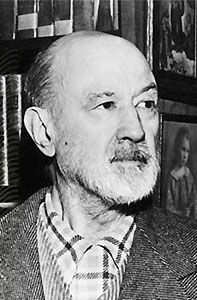
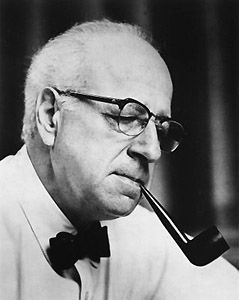
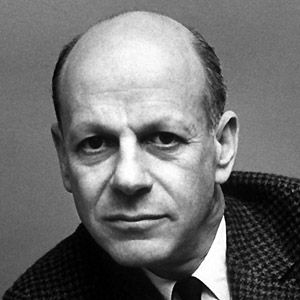
From left to right: Charles Ives, Walter Piston, William Schuman
Source: Dorian CD (my rip!)
Format: mp3, 320k/s (CBR), DDD Stereo
File Size: 177 MB (includes cover scans & booklet)
Download Link (re-up) – https://mega.co.nz/#!bk5S3TYI!MFk2bCUPkFnLQs0S8icqkBrlV1U437QLqJsDm_Q aLKI
Enjoy! Don’t share! 🙂
John Antill’s ballet Corroboree is an Australian classic, but far less known outside of the composer’s home country.
It is a vivid, and at times wildly imaginative, depiction of an Aboriginal ceremony – the composer himself took part in this
event at Botany Bay. Almost inevitably, there’s a strong Stravinsky influence in the piece, as in the programmatic
An Outback Overture, but in fact Antill mixes several very divergent elements into a strong, entertaining brew.
Music Composed by John Antill
Played by the New Zealand Symphony Orchestra
Conducted by James Judd
"Australian composer John Antill’s 1946 ballet Corroboree has the reputation of being some kind of antipodean
Rite of Spring, though Antill apparently didn’t know of Stravinsky’s ballet when he wrote his. Based on notes taken
during an actual corroboree – an Aborigine ceremonial gathering – Antill attended in 1913, the work achieved
instant success, if only in its concert suite form.
Sir Eugene Goossens and the Sydney Symphony Orchestra gave the first performance of that suite in the year of
the ballet’s composition, and there’s a 1950 (when the complete ballet was first staged) recording by the same
forces available on ABC Classics. But readers may be familiar with Goossens’s later account with the LSO on Everest.
Despite the many virtues of that disc, including the presence of Ginastera’s fabulous ballet suites Panambi and Estancia,
this new recording by the New Zealand Symphony Orchestra under James Judd wins hands down. It’s not just that it’s
complete (seven movements as opposed to four); the energy and precision of the playing, captured in pristine digital
sound, propel the music into a realm far beyond the residue of mere "white ‘Energy and precision propel fella’s
Dreaming" still the music into a realm far present in the Goossens. The colourful score, which culminates in the
"white fella’s Dreaming" frankly mind-blowing "Procession of the Totems and Closing Ceremony", has much of the
lurid primitivism of Revueltas’s La noche de los Mayas, but without the kitsch (bullroarer aside); Antill’s Outback Overture,
with which this disc opens, is by contrast a more conventional, if occasionally quirky, affair and more typical of the
omposer’s output. It, too, receives an excellent performance."
Gramophone
Source: Naxos CD (my rip!)
Format: mp3, 320k/s (CBR), DDD Stereo
File Size: 104 MB (incl. front cover & booklet)
Download Link (re-up) – https://mega.co.nz/#!akZh0QwJ!YKRykTx1qYSQklo74DXDzQ5K8DNCwlr9zXvmJ–6ZGA
Enjoy! Don’t share! 🙂
Thus far I am blown away by the very UN-Dutch lyricism of Diepenbrock (a composer I always avoided on account of his terrifying mustache) and the airy impressionist quality of D’Indy whose anti-Semitism rendered him low on my list. Suk however pretty much lives up to his name IMHO. 22 more to go!
No.26
American Don Ray (1925-2005) was one of those contemporary composers who clearly thought that the atonality train
had come to a stop, with no further station to go. Thus, he (with a background in TV scoring!) chose an idiom that roughly
corresponds to the Americana of Copland and Thomson (with a bit of Robert Ward), safely tonal,
very lively and melodious.
There are no great revelations in the Homestead Dances or the Suite (No.1) from Family Portraits,
but if you’re looking for folk-inspired US music with catchy tunes, look no further!
Music Composed by Don Ray
Played by The Dublin Philharmonic Orchestra
Conducted by Derek Gleeson
"Don Ray joined CBS in 1956 as a staff composer–his credits include work on such hits as The Twilight Zone and
Hawaii Five-O. Obviously the hallmark of this sort of work is versatility, and that is exactly what this disc of concert
pieces shows. Both works revel in the sort of rural Americana popularized by Copland and Virgil Thomson, though
without the Stravinskian element of the former, or the French sophistication of the latter. Ray’s music is direct,
tuneful, sometimes a little stiffly phrased, and, well, “commercial”, but certainly appealing if this style is your cup of tea.
Certainly as a composer Ray is far more interesting than, say, Karl Jenkins (of Diamond Music fame).
Homestead Dances, for oboes and strings, is a suite of dances reminiscent of the old folks gatherings of the
composer’s youth. It’s a substantial piece, about three quarters of an hour long, in nine movements. Threading
through the work are three waltzes that chart the three stages of life, from youth to maturity to old age.
It’s delightful. Family Portrait Suite No. 1, for full orchestra, once again recalls Thomson’s musical “portraits”.
Ray offers six brief, sharply contrasted vignettes, covering a broad range styles and colors, with popular dance
idioms clearly in evidence. The performances are all very satisfying–fresh and lively as the music requires–and the
engineering is outstanding. A very pleasant and fun release."
Classics Today (9/10)
Source: Albany CD
Format: mp3, 320k/s (CBR) DDD Stereo
File Size: 141 MB
Download Link (re-up, fixed) – https://mega.co.nz/#!A0ciXIqA!Sl9vMz0VTR55nO_501EUqyA4HxFo6s2vEL38PK3 8wWI
Enjoy! Don’t share! 🙂
Let’s return to Communist China for more orchestral works, some of which have a distinctly patriotic bend. 😉
The first album, "Ode to the Red Flag", consists of pieces by different composers who are/were well-known
in post-1949 China, and who were seeking to describe their ideological or social convictions in musical terms.
As such, Lu Qi-Ming’s Ode to the Red Flag and Chu Wei’s Monument to the People’s Heroes, are strongly
patriotic pieces, characterized by grand rhetorical gestures within a post-romantic idiom, direct in expression and
often declamatory. The rest of the works include Zhu Jian-Er’s non-programmatic, Prokofiev-ian Festival Overture,
shorter orchestral dances, and some actual pieces of film music like He Lu-Ding’s Evening Party. In fact, the
work that opens this album, Nie Er’s Chinese National Anthem, began its life as a piece of film music
("The March of the Volunteers"). These are all works that have remained popular classics even in post-Mao times.
The second album features three more extended works, opening with Liu Dun-Man’s Piano Concerto "The Mountain Forest".
It’s quasi-programmatic, the language kind of Rachmaninov-meets-Gershwin. It’s certainly an improvement on the vastly
popular "Yellow River Concerto" ;). Wang Xi-Lin suffered during the Cultural Revolution – he was sent to the countryside for
re-education, among other unpleasant experiences. His symphonic suite Yunnan Scenes, while very conservative in style (think
Chinese Tchaikovsky), is extremely color- and tuneful. The CD ends with another patriotic item, the tone poem
The Legend of the Yellow Crane.
Music by Nie Er, Lu Xi-Ming, Zhu Jian-Er, He Lu-Ding, Chu Wei, Liu Dun-Man, Wang Xi-Lin, Shi Yong-Kang, etc.
Played by The Hong Kong Sinfonietta
Conducted by Tsung Yeh
"Nie Er’s (1912-1935) ancestors were from Yuxi, Yunnan, in southwest China. He was born in Kunming, Yunnan. From an early age Nie Er
displayed an interest in music. From 1918 he studied at the Kunming Normal School’s Associated Primary School.
In his spare time, he learnt to play traditional instruments such as the dizi, erhu, sanxian, and yueqin, and became the
conductor of the school’s Children’s Orchestra. In 1922 he entered the Private Qiushi Primary School (Senior Section), and in 1925 entered
Yunnan Provincial Number One Combined Middle School.
In 1927 Nie Er graduated from Yunnan Provincial Number One Combined Middle School, and entered Yunnan Provincial Number
One Normal School. At school, he participated in the Book Club, and organised the "Nine-Nine Music Society", which performed
within the school and outside. During this time, he learnt to play the violin and the piano.
In June 1931, Nie Er entered the "Mingyue Musical Drama Society" as a violinist. In July 1932 he published A Short Treatise
on Chinese Song and Dance, in which he criticised the Drama Society’s president, Li Jinhui, as a result of which he
was forced to leave the society. Prior to joining the Lianhua Film Studio on November 1932, he took part in shaping the
Bright Moonlight Song and Dance Troupe. He later joined the musical group of the "Friends of the Soviet Union Society".
He also organised the "Chinese Contemporary Music Research Group", which participated in the Leftist Dramatist’s Union.
In 1933, Nie Er joined the Communist Party of China.
In April 1934, Nie Er joined the Baak Doi record company and managed the musical section. In the same year he founded the
Path??? National Orchestra. This was a prolific year for Nie Er in terms of musical output. In January 1935 Nie Er became the
director of the musical department of Lianhua Number Two Studio.
In April 1935, Nie Er went to Japan to meet his elder brother in Tokyo. There, he composed the March of the Volunteers,
which would soon become the national anthem of China."

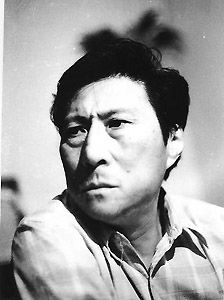
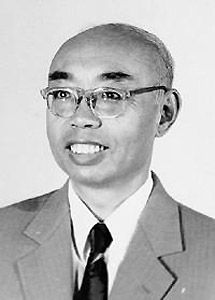
Left to right: Nie Er, Wang Xilin, Zhu Jianer
Source: Hugo CDs (my rips!)
Format: mp3, 320k/s (CBR), DDD Stereo
File Sizes: 120 / 154 MB
Ode to Red Flag (http://www.youtube.com/watch?v=LsbsAkTsXZ8)
A performance of "Ode to the Red Flag" in Austria.
Ode to the Red Flag (re-up) – https://mega.co.nz/#!5IATQLST!ZJi6OjCmlfzKqgWScJbJ0gByO_d_75THrcd5cC3 IKcg
The Legend of the Yellow Crane (re-up) – https://mega.co.nz/#!ZZQiHQZa!JNMV9AXf-PTPuc-NOGsxtH9Nqh0HeUkS7mkQCWL5ImI
Enjoy! Don’t share! 🙂
Not sure. I know at least one other film music blog, a vast one from Russia, that exclsuively uses depositfiles for downloads. If you’re a member of that it might be worth your while.
Maybe I’ll give freakshare.com a try later today. Does anybody know whether the links stay on there long?
Elinor Remick Warren was a neo-Romantic American composer of the 1930s and 40s whose works have only
just been resurrected from oblivion, although initially in her career she enjoyed some success. The works on this
album, all program music except the late, one-movement Symphony, are very well made and entertaining.
If you like e.g. Barber or Hanson or Delius, you’ll love her music!
Music Composed by Elinor Remick Warren
Played by the Royal Scottish National & BBC Concert Orchestras
Conducted by George Vass & Martin Yates
"Why do we not know more about the American composer Elinor Remick Warren? Lewis Foreman’s notes recount her life-story in extenso.
However do also have a look at Pamela Blevin’s even more detailed major article elsewhere on this site. This Los Angeles born and based
composer studied for an intensive three month period with Nadia Boulanger in Paris in 1959. A number of her works found their way on
to the Cambria label including the superb oratorio The Legend of King Arthur excerpted on this disc and given its UK premiere in 1995 by
Richard Hickox at the Goucester Three Choirs Festival . Her orchestral songs can also be found on Cambria. The Crystal Lake is a warm,
romantic Delian piece inspired by encountering a lake of this name during a 1940s holiday in the High Sierras. The Scherzo has an ever so
slightly malevolent elfin bounce. This is counterweighted by a fine noble melody for the strings with the mellifluous mercuriality of Smetana’s Vltava.
The Fountain is just as serene as The Crystal Lake which despite a slight Hollywood patina is redolent of the noblest extension in
Vaughan Williams’ Prelude to The 49th Parallel. Warren’s worklist is overshadowed by two works of majestic proportions and forces:
The Legend of King Arthur and the Requiem. From the former we get to hear the fine orchestral Intermezzo which is delightful,
swoons lavishly in a sort of hybrid of Delian poetry and, just occasionally, the swooping romance of a Waxman film score. After this comes
King Arthur’s Farewell superbly sung by Roderick Williams. Here the score is again indebted pleasingly to Delius’s Sea-Drift and
Once I Passed Through a Populous City. The contour of the melody occasionally veered towards Coleridge-Taylor’s Hiawatha a little
too close for comfort. The text is given in the booklet in full though the singer’s diction is such that you will not need it.
Along the Western Shore is a three movement orchestral suite: (i) Dark Hills; (ii) Nocturne; (iii) Sea Rhapsody. The Dark Hills are
plagued with desperately oppressive dark clouds that obliterate the lighter qualities of life. After such angst the Nocturne
comes as a typically Delian relaxation out of the same contented compartment as The Crystal Lake and The Fountain.
The Sea Rhapsody is a tempestuous affair and in it one can perhaps hear the roots of other such essays especially the comber-
dashing emotional turbulence of Flagello’s Sea Cliffs. The compact Symphony subsumes into its fabric three sections in an idiom
which is passionate, at times Baxian, at times noble in the manner of Elgar and yet reflects open-air Americana.
The last work is the four episode Suite for Orchestra. Its movements are: (i) Black Cloud Horses; (ii) Cloud Peaks; (iii) Scherzino:
Ballet of the Midsummer Sky; (iv) Pageant across the Sky. This is akin in its unsettled emotional upheavals to the outer movements
of Along the Western Shore. Its inspiration lies in the family’s five hundred acre ranch in the High Sierras – the cloudscapes set
against the Delian Heights, the storms and calm sunny days. There were several moments when it had me thinking of Delius’s
Song of the High Hills. The Berlioz-like impish capering of the third movement recalled the Scherzino in tr. 2. Pageant Across the Sky
is the finale. It has a conspiratorial nocturnal air to it at first but rises to stirring heights worthy of the mountain landscape.
This is irresistible stuff: lavishly driven by a neo-romantic lyrical impulse which should rapidly find an enthusiastic audience for more
from this source and new complete recordings of The Requiem and The Legend of King Arthur."
Music Web
Source: Dutton Epoch CD (my rip!)
Format: mp3, 320k/s (CBR), DDD Stereo
File Size: 175 MB
Download Link (new re-up) – https://mega.co.nz/#!n4RyQCqR!rPM7_5I8ANkzP_cq82AOl_MAfb7F_Mu6JwfLPtf fnak
Enjoy! Don’t share! 🙂
French composer Augusta Holm???s (1847-1903) shared the fate of many an aspiring woman composer in the latter half of the
19th century, namely that she wasn’t allowed to study piano and composition at a prestigious university, as only men were
allowed in there. She first took private lessons but ultimately studied with C???sar Franck, then the leading French composer.
The body of her work is small but distinguished, and she enjoyed her greatest success with the opera The Black Mountain.
She composed several tone poems, often with a political background, of which Irlande, Androm???de and Pologne are featured
in this collection, together with the Overture for a Comedy and an interlude from La Nuit et l’Amour.
Music Composed by Augusta Holm???s
Played by the Staatsphilharmonie Rheinland-Pfalz
Conducted by Samuel Friedman & Patrick Davin
"Even if Augusta Holmes has left no great mark on the history of music in general, in the ranks of women musicians
she occupies an honoured place. Born in 1847 of Irish parents (though it was rumoured that Alfred de Vigny, her godfather,
was her real father) but living all her life in Paris, she was an excellent pianist and gifted singer: her beauty turned
the heads of many, including Saint-Sa???ns, her teacher C???sar Franck???whose emotional involvement with her is reflected
in his Piano Quintet???and famous painters and poets who frequented her salon (she bore Catulle Mend???s several children).
Many obstacles, however, were put in her way as a composer, where, unlike many of her female contemporaries, she was
drawn to the larger forms???symphonic and operatic???and despite anti-feminist prejudice enjoyed some signal successes,
such as with a Triumphal ode given with 1,200 performers at the 1889 Paris Exhibition.
All the works on this disc date from the 1880s except the unpublished Ouveriure pour tine com???die (which nevertheless
seems to have been performed) from the previous decade. That was before she began studying with Franck; and despite
the skilful and colourful scoring (particularly in the delicate opening), there are evident weaknesses in construction
and in the variable quality of the material. A notable advance is heard in the three symphonic poems of 1882-3.
There is nothing in the least ‘feminine’ (if one may use that word in these politically correct times) about the challenge
flung out by the brass at the start of Androm???de or the heroically energetic thrust that follows it??? which seem to
depict Perseus rather than the unhappy legendary heroine of the title, who is represented musically, in broad lyrical
phrases, only in the closing section of the work. Its one weakness is an over-use of the Franckian trick of repeating
short phrases successively a tone higher each time.
The same device is still more in evidence in Mande, a fervent plea for political freedom, a cause with
which she was much associated (her father was a noted Fenian). It begins, in original fashion, with a long
melancholy clarinet solo: there is some local colour, with a hearty jig, but most striking is Holmes’s ability to
spin long, lyrical lines: it culminates in a menacing uprising and a triumphant quotation of Let Erin remember.
Pologne, after sections in national rhythms, contains a graphic battle scene (or is it, as suggested in the
excellent note, a musical representation of a picture, The Warsaw massacres?) and ends in a mood of lofty
aspiration. One can scarcely complain if an interlude entitled "La nuit et l’amour" from a grandiose symphonic
ode is soupily romantic.
On the whole, Holmes’s slightly younger contemporary Dame Ethel Smyth was not far out, if a trifle
ungenerous, in describing her as "evidently not among the giants, but … knew how to cut a gem".
The Rhineland-Pfalz orchestra does her proud, with wholeheartedly committed playing, and the recording,
made by the S???dwestfunk, is first-rate."
Gramophone
Source: Marco Polo CD (my rip!)
Format: mp3, 320k/s (CBR), DDD Stereo
File Size: 118 MB
Download Link (re-upped by Herr Salat) – https://mega.co.nz/#!5U0HnArA!BkbjBReXRsVkQEvO5ljsmT8cOx5yUFwCQMinrPH tII8
Enjoy! Don’t share! 🙂
———- Post added at 10:55 AM ———- Previous post was at 10:27 AM ———-
No.31
This album was suggested to me by our member dj???houty, so thanks to him for the
idea & of course the music, of which I’m posting the link he sent me.
Ahmad Pejan (*1937) is an Iranian composer who has been living in American exile
since the revolution in his home country in 1979. He has since been composing concert
works as well music for documentary features. Nagahan Rastkhiz (Resurrection), the epic
choral tone poem featured here, is a powerful, dynamic work in a style not far from that
of Carl Orff in his Carmina Burana.
Music Composed by Ahmad Pejan
Played by the Russian National Symphony Orchestra and Chorus
Conducted by Sergey Skripka
"Sudden Resurrection": Composed by Ahmad Pejman & Conducted by Sergey Skripka on Rumi Poetry – YouTube (http://www.youtube.com/watch?v=ARmMn5hJaHM)
A youtube link to the first track of the album
Format: mp3, 128k/s (CBR), Stereo (by dj???houty)
File Size: 58 MB
Re-up by dj???houty – https://mega.co.nz/#!fo40xboC!TB9wOQWw1AFlvFLLEL0Ld1YlG2ImeIncKPLiwhh ZsCw
Enjoy! Don’t share! 🙂
Thanks to the original and very creative uploaders for these precious rarities!
Maybe I’ll give freakshare.com a try later today. Does anybody know whether the links stay on there long?
Thanks again. It’s really amazing that you collect orchestral music from all different countries. Although I consider myself as a big music fan (in classical style), many of the composers you posted here I never heard of.
I use mediafire for two years, no problems. But depositfile is not too bad, as long as you don’t post them as "limited time release":-)
No.32
Of all the subjects depicted in program music over the last century and a half certainly a major part
has been inspired by the sea: its lyricism as much as its unrelenting and uncontrollable power. Evidence
is provided by many recordings, of which this is one of the more intriguing. It features the "No.1"
classic of all sea-inspired musical works, Debussy’s La Mer, alongside the relatively obscure Ocean Suite
by Estonian composer Veljo Tormis. The latter is represented by another suite, Swan Flight, and
the album wraps up with Jean Sibelius’s popular The Swan of Tuonela. An intriguing collection
indeed, as Tormis’s music is strikingly vivid and brilliantly lucid. No introduction is needed for the other two.
Music by Veljo Tormis, Claude Debussy & Jean Sibelius
Played by the Estonian-Finnish (now: Nordic) Symphony Orchestra
Conducted by Anu Tali
"This disc contains serious music-making of a very high order. The EFSO is a magnificent band, Tali directs the
music with passionate commitment and a strong sense of purpose, and it’s all captured in a very fine recording,
making excellent use of the natural ambience of the Estonia Concert Hall in Tallin.
This is a beautifully executed disc, but also beautifully planned, for the style of the unfamiliar Tormis seems to owe a
great deal to both Debussy and Sibelius. All the pieces begin softly in the depths, and, uncannily, Swan Flight even
commences with the little phrase, with its rising major second to a ‘scotch snap’ rhythm, which we have just heard
as one of the crucial motifs in the Debussy.
Understandably, the issue focuses on the music of the Estonian composer, even though La Mer is of course the best-known
work here. Tormis’s Ocean is a suite of incidental music that he wrote for a play by Alexandr Stein back in 1961.
As befits music for the stage, it is sharply characterised and brilliantly, if fairly simply, orchestrated. It is full of
memorable musical images, framed by stormy music depicting the sea, and passing through a multitude of moods,
from the violence of Anger, through the Sibelian shimmer of Snowstorm, and taking in two delightful and intoxicating waltzes.
Swan Flight, a suite taken from Tormis’s music for the opera Luigelend, is a rather later and texturally more complex piece.
I mentioned the link with La Mer above; the real link, though, is with Sir???nes from Debussy’s Nocturnes, for we have
here a wordless female choir (the excellent choir isn’t clearly credited), suggesting the calls of the swans, around whose
story the opera revolves. This is wonderfully evocative music, subtler than Ocean, though clearly from the same stable,
and full of the same vivid touches of instrumentation and melodic invention. Not earth-shatteringly original music perhaps,
but highly individual and superbly fashioned.
Naturally, it is the Debussy that we must turn to in order to get an idea of how good, on an ‘international’ scale, these
performers really are. And the answer turns out to be very good indeed. This is a really terrific version of La Mer, and I do
hope sales of the CD don’t suffer because they, rather bravely, haven’t ‘headlined’ this, the best-known piece. Tali has a
wonderful sense of the pace of the music, keeping it moving forward, yet setting tempi that allow the players to shape
the phrases with the sort of loving care they need. I’ve rarely heard a more beautifully played account, and for me the
real eye- (or rather ear-) opener was the middle movement Jeux de Vagues (Games of waves), which has never
had a greater sense of wild, glittering abandon.
Tali also has a fine sense of balance (helped of course by the Finlandia engineers); all the subtleties of orchestration
come out, barely a detail is lost, yet I don’t feel any sense of spot-lighting. Brass and percussion blaze and crash
as they should, without overwhelming the rest.
The final item is the wonderful Swan of Tuonela of Sibelius, one of his Lemmink???inen tone-poems. This gets
a most sensitive performance, though I wouldn’t say Pirjo Lepp???nen, who plays the demanding cor anglais solo,
is the most sweet-toned exponent of the instrument. On the other hand, this is deeply-felt playing, and the slight
rawness of tone adds a further poignancy to the expression in places.
This is a disc to be treasured, and I can’t wait to hear more from the brilliant combination of Tali and the EFSO."
Music Web
Source: Finlandia CD (my rip!)
Format: mp3, 320k/s (CBR), DDD Stereo
File Size: 148 MB
Download Link (re-up) – https://mega.co.nz/#!N9l3yIhD!CgLOuQsVoe32UwEZu-un_wU_fx0-v8eFj684qq2PY-M
Enjoy! Don’t share! 🙂
———- Post added at 12:48 PM ———- Previous post was at 12:40 PM ———-
Thanks again. It’s really amazing that you collect orchestral music from all different countries. Although I consider myself as a big music fan (in classical style), many of the composers you posted here I never heard of.
I use mediafire for two years, no problems. But depositfile is not too bad, as long as you don’t post them as "limited time release":-)
I read somewhere that mediafire will often delete files without notice. AFAICS depositfiles keeps them "forever". 😉
Glad you enjoyed and shared Ahmad Pejman’s album. ; )
I hope others will enjoy it too.
I’ll think about other works that could be shared in this thread and PM you if I find some.
Louis Vierne and Ernest Chausson were both highly respected composers of the French romantic school, but their
music still isn’t to be found as often as one would like in the concert hall. Thankfully, most rediscoveries of classical
composers these days take place on albums anyway, at least at first. Vierne is best known for his organ music –
in fact, his 6 organ symphonies are cornerstones of the instrument’s repertoire. His orchestral works have enjoyed a far lower
profile, although, on evidence of Les Djinns, ???ros and Psych??? recorded here, they most definitely invite
rediscovery. Ernest Chausson’s wonderfully sumptuous, intoxicating Po???me de l’Amour et de la Mer OTOH
is a recognized masterpiece routinely performed with a mezzo-soprano, but sung by a tenor (as in the other works) here.
Great music, this.
Music Composed by Louis Vierne and Ernest Chausson
Played by The Queensland Orchestra
With Steve Davislim (tenor)
Conducted by Guillaume Tourniaire
"Vierne’s orchestral songs are disc premieres—and therefore self-commending—while male voice traversals of Chausson’s
Po???me de l’amour et de la mer have been few and far between. One thinks back to a 1977 recital by baritone Bruno Laplante
(Calliope 6860) and ahead to a 2007 collection from baritone Jean-Fran???ois Lapointe (Analekta 29924), both of whom
essayed it with piano accompaniment. That leaves the venerable G???rard Souzay’s classic account, with Edgard Doneux
leading the Belgian Radio/TV Chamber Orchestra (Testament 1208). As Jacques Tchamkerten’s informative annotations
tell, “These days Po???me de l’amour et de la mer is usually performed by female singers, but it was written for a tenor
voice, as the printed score expressly states.” Perhaps. My ancient, undated, pre-public domain Badoux vocal score
states only “pour une voix (???lev???e) et orchestre,” while The New Grove’ s works list remains noncommittal.
The piano transcription, made in 1896, three years before the orchestral version, is Chausson’s. Tchamkerten’s
conclusion—“This recording therefore restores the original version as the composer intended”—is questionable and
beside the point. At issue is expressive power. And in that young Australian tenor Steve Davislim is certainly not lacking,
bringing a measured pathos to Chausson’s representation of a seaside romance gone flat—the essentially light,
bright voice evincing more darkly hued reserves for the shuddering realization of loss, but still the projection of a young adult,
where Souzay’s caressing baritone and avuncular mien (accidents of circumstance) are more suggestive of Humbert Humbert.
The four Vierne songs are evenly divided between horror-show theatrics laid on in primary colors—whelming swarms
of evil spirits in Les djinns , the insistent visitor revealed at last as Death in Ballade du d???sesp???r??? —and the coy erotic
charms suggested by their titles, Eros and Psych??? . Where Franck’s Les djinns , for piano and orchestra, for instance,
excuses him from facing Victor Hugo’s verse while providing chills and thrills aplenty, and Faur???’s choral setting affords
deftly tongue-in-cheek excitement, Vierne takes it all quite seriously, skirting bathos in lurid depiction. The hovering
tremulousness of Eros and Psych??? , delicately spun out of the billowing chromatic swells of Franck’s Psych??? ballet,
leaves one in no doubt how precious close feminine companionship was to Vierne. Through them all, his post-Romantic
lushness takes on a near-expressionist intensity—not for nothing the album title, “Turbulent Heart.” Complementing
so much affetuoso orchestral writing, Melba’s surround affords a richly detailed, immediately balanced aural repletion,
with Davislim (contrary to the usual highlighting), never covered but, well integrated with the superb Queensland Orchestra,
led with aplomb by Guillaume Tourniaire. Melba’s production values are luxurious, with Tchamkerten’s annotations,
biographies of Davislim and Tourniaire, a listing of the Queensland Orchestra personnel, and the poems in French,
English, and German, on heavy, colorfully set-off stock, in eye-welcoming 11-point type, making a fat 99 page booklet,
pasted into the cardboard sleeve—a palpable harbinger of the sumptuousness on disc. Splendid!
Fanfare
Source: Melba CD (my rip!)
Format: mp3, 320k/s (CBR), DDD Stereo
File Size: 163 MB (incl. booklet)
Download link (re-up) – https://mega.co.nz/#!xdB1gD4Z!eHkBF3OWQYkNAmR_t4fCbR8JdNlXm3SmLaPA_d4 Tl4A
Enjoy! Don’t share! 🙂
With more than 500 compositions to his credit, Leo Sowerby was one of America’s most prolific 20th century composers.
He was also an influential teacher (his students included Gail Kubik and Ned Rorem) and won a Pulitzer Prize for his cantata
Canticle of the Sun in 1946 – still, he’s hardly known outside of the US. This album features some of his orchestral tone
poems: Prairie, Comes Autumn Time and the multi-movement From the Northland. The music is lyrical
and neo-Romantic.
Music Composed by Leo Sowerby
Played by The Czech National Symphony Orchestra
Conducted by Paul Freeman
"Leo Sowerby (1895-1968) is an all but forgotten American composer who was overshadowed by
his contemporaries, Copland, Hanson, Harris, Barber and others. Yet, his career began with a meteoric rise:
when he was only twenty-one the Chicago Symphony Orchestra devoted an entire concert to his music!
Works on the program included the unlikely duo of his Cello Concerto and The Irish Washerwoman.
Most of his 550 compositions were liturgical – he was organist and choirmaster at St. James Episcopal Cathedral in
Chicago for many years – but he did produce twenty-nine orchestral scores, including five symphonies.
His music is tonal and colorful, at times containing echoes of Respighi – a sort of Americanized Respighi –
because of its sparkling orchestration and moments of what one might describe as exotic Americana. Theme
in Yellow is probably the most substantial work here. Subtitled, "Poem for Orchestra after Carl Sandburg"
(as is Prairie), the work here enjoys its premi???re recording. It is light in character, less serious than the iffy
but once-popular Prairie, and solidly-crafted.
From the Northland is subtitled "Impressions of the Lake Superior Country" and has four titled sections:
Forest Voices, Cascades, Burnt Rock Pool, and The Shining Big-Sea Water. Each is quite atmospheric and
imaginatively orchestrated, and the succession of movements presents one effective contrast after another.
Cascades, for example, is colorful and lively, gossamer and delicate in its subtle instrumentation and playfully
mysterious mood, creating quite a different sound world from that of the glacially-paced and autumnal Forest
Voices. Speaking of things supposedly autumnal, the opening work, Comes Autumn Time, does not actually
bring that season to mind: this is a colorful and light work that could have been named Springtime. It was also
once a quite popular work, with Monteux, Walter, Stokowski, Damrosch, Rosbaud and others leading
performances of it.
Paul Freeman and the Czech National players turn in fine work here and Cedille offers vivid sound and informative
notes. If American music by a master craftsman from the first half of the 20th century appeals to you, then
you will find this disc a most interesting discovery. "
Classical Net
Source: Cedille CD
Format: mp3, 320k/s (CBR), DDD Stereo
File Size: 143 MB (incl. booklet)
Download Link (re-up) – https://mega.co.nz/#!oltUwYIJ!YMtvTRbMYwL6ingQDQ4vlms36OdCsY1kq87ZogW lvJs
Enjoy! – Don’t share! 🙂
thanks wimpel69, I’m sure we’ll learn quite a lot with these great shares!
No.35
This is one of the great works of symphonic program music. Period.
This is its greatest recording. Period. It’s also the only complete one.
You must have it. Period. 🙂
Charles Koechlin’s vast, sprawling multi-movement tone poem The Jungle Book
was composed in fits and starts over several decades(!), but the result is a unique, mesmerizing
panoply of orchestral (and vocal) elements that come together in a wildly imgainative and
sweeping musical account of the Kipling classic. Koechlin stuructured the symphonic cycle
in a manner so that its individual parts may also be performed independently, which, in fact,
has become a standard (if at all) because of the length and logitistic demands of the work. Certainly,
the single most often performed piece is Les Bandar-Log. Here, the great David Zinman brings
it all together in a wondferful performance for the ages.
The composer, Charles Koechlin, is one of the more mysterious and erratic in 20th century
music. It has only been in the past two decades that more and more recordings of his
several unique works (including a "Seven Stars Symphony" inspired by some of the
classic movie stars that Koechlin, a rabid cinemaniac, adored) have turned up, some only
very briefly. Not one of them has ever become a standard in the concert repertoire, yet many
know the name of the composer, but not his works. Enjoy!
Music Composed by Charles Koechlin
Played by the Berlin Radio Symphony Orchestra
With Iris Vermillion (mezzo-soprano)
Conducted by David Zinman
1. Three Poems, Op.18: 1. Seal Lullaby – Iris Vermillion/Johan Botha/Ralf Lukas
2. Three Poems, Op.18: 2. Night-Song in the Jungle – Iris Vermillion/Johan Botha/Ralf Lukas
3. Three Poems, Op.18: 3. Song of Kala Nag – Iris Vermillion/Johan Botha/Ralf Lukas
4. The Spring Running, Op.95: Spring in the Forest
5. The Spring Running, Op.95: Mowgli
6. The Spring Running, Op.95: The Running
7. The Spring Running, Op.95: Night
8. The Meditation of Purun Bhagat, Op.159
9. The Law of the Jungle, Op.175
10. Les Bandar-log, Op.176
"This recording is the World Premiere of Charles Koechlin’s Jungle Book and received the Orchestral Gramophone Award
and was, memorably, accepted by the son of the composer. Charles Koechlin loved Rudyard Kipling’s The Jungle Book
and set different parts of the book to music at various points in his career. The first of these – The Three Poems –
bear the titles: Seal Lullaby, Night Song in the Jungle and Song of Kala Nag, with texts from The Jungle Book.
The music, scored during 1904 – 14, is exotic and evocative. The lullaby mimics the gently lapping of waves as the soprano
and chorus spin a soothing tapestry of sound. The Night-Song in the Jungle had a cadence that suggests movement
(sung by the soprano, tenor, baritone and chorus) and is a song of well-wishing to the animals of the night.
The Song of Kala Nag is a lament of an elephant that has been tamed for his old life in the jungle, sung by the tenor.
The poem describes a night in the year when all of the elephants gather to dance together and, rather than being somber,
the music is triumphant as the elephant recounts his past freedom and vows to have it again.
The Spring Running was written during 1925 – 27 and has four sections: Spring in the Forest, Mowgli, The Running and Night.
These are atmospheric pictures of the final part of Kipling’s book where Mowgli leaves the jungle for the world of humans.
The series of tone poems relate how Mowgli is taught the laws of the jungle by the tiger Bagheera and the bear Baloo.
The Mowgli section is particularly descriptive of a young man discovering the jungle and is beautifully scored to describe
the awe of the unfamiliar and The Running beautifully describes life in the jungle.
The Meditiation of Purun Bhagat was longer in the writing having been attempted from 1903 and 1923 and finally
completed in 1936. This tone poem describes Purun Bhagat who was a powerful politician and becomes a pilgrim and
saves a village from destruction. It is an atmospheric piece the gradually builds from a long, meditative melody to a
fortissimo climax, then returns to the serenity that began the movement.
The last pieces, The Law of the Jungle and Les Bandar-log, were written together. The Law of the Jungle is the
reciting of the laws by Baloo the bear and sounds like a sing-song pronouncing of the laws, each capped by a gong. L
es Bandaar-log are a group of noisy monkeys that live atop the trees and are disliked by the other jungle residents
as being loudmouthed. The final tone poem begins quietly, as if the sun is rising over the jungle. After this quiet
introduction, the monkeys are described with the use of jagged rhythms that develop into contrasting melodies.
This is very expressive music that beautifully conveys the atmosphere of Kipling’s Jungle Book. The performance
by the Radio-Symphonie-Orchester Berlin is beautifully played and certainly a labor of love for David Zinman.
The recording is nicely balanced and captures each nuance of this expressive music."
Source: RCA-BMG CDs (my rip!)
Format: mp3, 320k/s (CBR), DDD Stereo
File Size: 205 MB
Download Link (re-up) – https://mega.co.nz/#!1IpCWYaC!XAl6vmJ541Yh4QzountyDRRtyEZZDALcS91Lx5w Liuc
Enjoy! Don’t share! 🙂
Finnish composer Uuno Klami’s Karelian Rhapsody, which opens this album of his three most popular works,
was a pretty big hit in his home country when it came out. His programme music is delicately wrought, a testament to
the craft he picked up in his studies with Maurice Ravel and Florent Schmitt. Although the title of the rhapsody
and that of the Kalevala Suite would suggest the inclusion of folkloristic Finnish material, in fact Klami’s influences
were primarily European.
Music Composed by Uuno Klami
Played by the Iceland Symphony Orchestra
Conducted by Petri Sakari
"While the world of pre-Sibelius Finnish music is thinly populated with composers — Karajan [???], the only Finnish composer
before Sibelius of note, stopped after hearing Sibelius’ music — the world of post-Sibelius Finnish music is densely populated
with composers. In addition to Melartin, Madetoja, and Merikanto, there was Uuno Klami, the subject of this 1993 Chandos
disc with Petri Sakari leading the Iceland Symphony Orchestra. While in terms of sound, Klami was quite far from Sibelius —
there are few grinding ostinatos, fewer pounding rhythms, and fewer still gnarly forms and nary a gnomic harmony —
in terms of subject matter, the two were similar to the point of plagiarism — Sibelius wrote a Karelia Suite and a
Kalevala Symphony while several decades later Klami wrote a Karelian Rhapsody and a Kalevala Suite. Klami’s pieces
here were among his most popular in his lifetime, and they are still his most immediately appealing today. Melodic, direct,
evocative, and colorful, Klami’s music is in fact more immediately appealing than Sibelius’ own music."
Source: Chandos CD (my rip!)
Format: mp3, 320k/s (CBR), DDD Stereo
File Size: 154 MB
Download Link (re-up) – https://mega.co.nz/#!ZAZGhAbI!LBfdcwFzMYcPsSFzm0DrIVVx3pgS14b_U8JTpL0 eERQ
Enjoy! Don’t share! 🙂
John Ireland was a contemporary of Ralph Vaughan Williams and Arnold Bax, and, as such, a second generation
"member" of the English Musical Renaissance, which began with Elgar, Stanford and Parry. He is less popular than RVW,
even than Bax, maybe because his music is a bit heavier-footed and less obviously "British". Nevertheless, there are
several substantial and entertaining works, and there’s certainly a nice selection on offer here. The Lyrita album includes
Ireland’s only film score, for the Ealing production The Overlanders, shot on location in Australia. Its story of the
plight of pioneers on the outback steppe allowed for a dramatic and varied score, and the concert suite conductor
Charles Mackerras extracted from the music (never available in the original film version) is powerful indeed. Also included are the oriental
tone poem Mai-Dun, the elegant London Overture, The Tritons and The Forgotten Rite.
As usual, Sir Adrian Boult’s versions have never been bettered.
Music Composed by John Ireland
Played by The London Philharmonic Orchestra
Conducted by Sir Adrian Boult
"Vintage Ireland from the legendary Boult Lyrita stable assembled from three of Boult’s four Lyrita LPs devoted to Ireland,
this generous programme launches with the redblooded symphonic prelude Tritons (a student offering from 1899,
premiered two years later at an RCM concert under his teacher, Stanford). Boult and the LPO do not shirk the
melodrama and go on to lend equally dedicated advocacy to the magical 1913 prelude The Forgotten Rite and
glowering 1921 symphonic rhapsody Mai-Dun (albeit without eclipsing rosy memories of Barbirolli’s inspirationally
intense mono recordings with the Halle).
For me, however, the stand-out track remains Boult’s wonderfully spry and observant account of A London Overture (1936),
which is easily a match for Barbirolli’s almost exactly contemporaneous LSO version for EMI. The 1942 Epic March, too,
glints with memorable defiance. The Julius Caesar diptych (fashioned by Ireland’s pupil Geoffrey Bush from some fragmentary
incidental music for a 1942 BBC radio production) is less immediately gripping, but the five-movement suite compiled by
Charles Mackerras from Ireland’s 1946 score for Ealing Studios’ The Overlanders certainly has its moments, not least the
touching "Romance" (which plunders material from A Dazonlancl Suite of 1932) and infectiously jaunty outer portions
of the central "Intermezzo".
Considering some of these sessions took place as long ago as December 1965, the judiciously refurbished sound
still packs quite a punch: sample the impressively full-throated horns at the start of "Night Stampede"
(the last movement from The Overlanders). Altogether a very welcome reissue — and I gather a second
volume will not be long in following."
Gramophone
Source: Lyrita CD (my rip!)
Format: mp3, 320k/s (CBR), ADD Stereo
File Size: 179 MB (incl. cover art, booklet)
Download Link (re-up) – https://mega.co.nz/#!8FRQQTaI!IUUYinLw7eDqxP1Q2AQEKwUxYbEmdqij_l0fkt6 FGC8
Enjoy! Don’t share! 🙂
It is not very often that an aspiring young composer not only cites a senior colleague best known for his film work as the
primary influence on his music (Jerry Goldsmith), but was actually mostly trained by film composers himself. Peter Boyer
is that rare animal, and although his own work has been almost exclusively in concert music, his teachers at the USC
included no other than Elmer Bernstein, David Raksin and Christopher Young – after earlier studies in NYC with John Corigliano.
Given these diverse influences it is hardly surprising that Boyer’s own music is wildly eclectic, and mostly tonal. Yet his voice
is unmistakably contemporary, and just as unmistakably American. He acknowledges the influence of Goldsmith, going so
far as to quote from the famous Planet of the Apes film score in one of his works. His tone poems, suites and overtures
are brilliantly orchestrated and fluently crafted, demanding an utmost level of virtuosity from the orchestra – a virtuosity not
always present in these composer-sponsored LSO recordings for KOCH, which out of necessity must have been
glorified sight-readings. Still it is good to have this album from 2001, when Boyer was just 31 years old!
Music Composed and Conducted by Peter Boyer
Played by the London Symphony Orchestra
"American composer Peter Boyer (b. 1970) made a (musical) splash for himself with his symphonic poem Titanic,
which preceded the film by several years but offers in about 13 minutes what takes James Cameron three hours
and 10. It begins with a portrait of the hostile sea, characterizes the ship and passengers with music evocative of
the period (including “Alexander’s Rag Time Band”), hits the iceberg with the obligatory percussive crash, then
sinks to an ominous passacaglia punctuated by the strains of “Nearer My God to Thee”, which according to
legend was played by those now famous musicians who accompanied the vessel’s final moments. A ghostly
reminder of all of the previous tunes, simultaneously layered, makes a fitting coda both programmatically and musically.
The most impressive thing about this work is the manner in which Boyer has found musical analogs to the actual
events being depicted so as to give the piece a form and substance independent of its purely descriptive aspects,
a quality shared by all good program music. For example, the final passacaglia admirably conveys the inexorability
and terror of the ship sinking without the necessity for graphic instrumental explosions, downward scales, glissandos,
or other “cheap” effects. That’s something Boyer should keep in mind because the other works on this disc aren’t
wholly free of such things.
Consider for example the two overtures, Celebration and New Beginnings, occasional pieces of a deliberately popular cast.
Now none of Boyer’s music moves much beyond traditional harmony and melody, and he’s clearly learned a great deal
about orchestration from his teacher John Corigliano and from the film composers he professes to admire (Jerry Goldsmith
especially). But being “traditional” doesn’t mean that you have to be obvious, as in the final return of the Big Tune
at the end of New Beginnings (more than a hint of Goldsmith here–perhaps the lyrical central section of Capricorn
One’s overture, or a bit of The Blue Max), where the suspended cymbal rolls add a touch of cheesy glitz that the
music really doesn’t need. Rippling celesta passages, shimmering wind chimes, and decorating a lyrical tune with
glockenspiel and other bell sounds always makes an appropriate effect, but these devices also give the music a ready-made,
manufactured quality–a sonic sameness that rapidly palls. Anyway, that’s my two-cents’ worth.
This observation aside, it’s smooth sailing as far as the remaining works go. All three deal with the mythological subjects
near and dear to Boyer’s heart. The Phoenix does what its title implies: flies around, burns up, dies, and gets reborn.
It’s a marvelous musical subject and Boyer has captured its essence colorfully and concisely. Ghosts of Troy has something
of the starkness of Barber’s Medea ballet, its six short, linked movements also paying tribute to Goldsmith’s score to
Planet of the Apes (compare “The death of Patroclus” to Goldsmith’s cue “The Clothes Snatchers”). Three Olympians
(as in Greek gods, not sports figures) just might be the most impressive work here, both for the sonorous inventiveness
of its strings-only scoring, with “modernistic” and textural effects such as snap pizzicatos, harmonics, and glissandos
perfectly integrated into Boyer’s own tonal idiom, as well as for the distinction of its tunes, especially the lovely one
in the central movement depicting Aphrodite.
The performances under the composer’s own direction sound suitably confident, though I think a little more session
time would have given Boyer the opportunity to achieve additional precision in the 7/8 and 10/8 concluding sections
of New Beginnings, as well as to inject a touch more fleetness at that same point. Sonically the recording has great
transparency and presence, but a definite “studio” atmosphere, meaning a dryness that denies the bass maximum
amplitude and a lack of reverb that tends to make the trumpets sound a bit tinny. Boyer is, without question, a
serious talent and a composer to watch. At this early date it’s impossible to define his personal “style” with any
specificity, nor is it necessary. All we need to do now is sit back and enjoy, and the music on offer here certainly
invites you to do just that."
Classics Today
Source: Koch International CD (my rip!)
Format: mp3, 320k/s (CBR), DDD Stereo
File Size: 145 MB
Download Link (re-up) – https://mega.co.nz/#!MExViLSY!KPLFS2hg0SPVYULgbL83r0dy-IYfWVEMy8bAbE6SwSQ
Enjoy! Don’t share! 🙂
Kevin Kaska (*1972) is a young American composer who, considering his age, has already had his music performed
by many international orchestras, and has built quite a body of work within a few years. In view of the present album,
which features several of his symphonic tone poems (such as Battle for Atlantis, Mount Vesuvius, The Lake Isle
of Innisfree, The Golden Falcon and Ocean of Forms), Kaska ought to be in pictures. He did work as an arranger
for John Williams and the Boston Pops, among many other commissions. He also orchestrated film
music for Hans Zimmer (whose "own" music Kaska roundly outclasses) and John Debney. His works are
sweeping, brilliantly orchestrated, tonal, accessible – the kind of music that you’ll love if you like the epic fantasy scores
of Howard Shore. Everything about this album, including the booklet, are colorful – not profound perhaps,
but very, very entertaining.
Music Composed by Kevin Kaska
Played by the Royal Scottish National Orchestra
With the Winchester Cathedral Chamber Choir
Conducted by Allan Wilson
"American composer, arranger, record producer, and conductor, Kevin Kaska is one of America’s leading young musical talents.
His orchestral compositions, arrangements, and orchestrations have been played by over 50 symphony orchestras worldwide,
including John Williams and Keith Lockhart with the Boston Pops Orchestra, Saint Louis Symphony, London Symphony Orchestra
(five CDs), Royal Scottish National Orchestra (recorded on CD), New Zealand Symphony Orchestra (recorded on CD), Maynard
Ferguson and his Big Bop Nouveau Band, Skitch Henderson and the New York Pops at Carnegie Hall, the Seattle Philharmonic,
Port Angeles Symphony, Springfield Symphony, Berkshire Symphony, Cape Ann Symphony, Phoenix Symphony, New Mexico
Symphony, Austin Symphony, Jacksonville Symphony, Columbus Symphony, Wichita Symphony, Long Beach Symphony,
Modesto Symphony, Buffalo Symphony, Racine Symphony, Glens Falls Symphony, Fargo-Moorhead Symphony, Symphony
Pro Musica, Orchestra X in Houston, Youngstown Symphony, Chamber Orchestra of Philadelphia, Cascade Symphony, Doctor’s
Orchestra of Houston, Los Angeles Jewish Symphony, Bavarian Philharmonic, Bach Collegium of Munich, Puertro Rico Philharmonic,
Silicon Valley Symphony, Panama City Pops, and the Boston Metropolitan Orchestra.
This year Kevin Kaska was asked to write a big band composition entitled Ballroom Bounce that is currently playing in the movie
Public Enemies starring Johnny Depp, directed by Michael Mann. He also collaborated on Chicago Shake with Bruce Fowler,
Harry Garfield, and Don Nelson.
In 2008 Kevin Kaska was asked to score the music to the drama Jump! directed by Joshua Sinclair. The fim stars Patrick Swayze.
The DVD is available on Amazon.
Kevin Kaska is one of the few musicians to hold a Guiness Book of World Records. The World Harp Congress commissioned
Kaska for a work that was premiered with the largest harp ensemble in recorded history. Kaska conducted the concert of
232 harps in Amsterdam, July, 2008.
Film composer John Debney asked Kaska to collaborate on the score to the video game Lair (released August, 2007,
Kaska wrote additional music for the game). This score was recorded in London at Abbey Road Studios with a
90 piece orchestra. The soundtrack is available in iTunes.
Kevin Kaska’s music has also been played by many classical radio stations nationwide including Classic King FM 98.1
Seattle, WUSF 89.7 FM South Florida, WMBR 88.1 Boston, WCRB 102.5 Boston, KFUO 99.1 St. Louis.
He also also been interviewed by these radio stations discussing his music.
Film composer John Debney asked Kaska to orchestrate his music into a 70 minute concert choral symphony
based on the themes he wrote for the Mel Gibson film, The Passion of the Christ (Academy Award nominated score).
The Passion Of the Christ Symphony was premiered in Rome with the Santa Cecilia Orchestra and Choir in July of 2005.
Kaska has also worked for John Debney as an orchestrator on the films Chicken Little, Mummy 3, Evan Almighty,
A Thousand Words, Meet Dave, Swing Vote, Zathura, Idlewild, Barnyard, Ant Bully, and Everyone’s Hero. He has also
orchestrated music for the video games Call of Duty III by Joel Goldsmith and Transformers by Steve Jablonsky
as well as the film Transformers 2.
Kevin Kaska also orchestrates for film composer Hanz Zimmer. He has orchestrated on The Dark Knight,
Angels and Demons, Madagascar 2, Monsters vs. Aliens, and the mini-series The Pacific.
Kevin Kaska was introduced into the Boston Pops Orchestra at the age of 21. John Williams approved his
work and he was asked to write for the orchestra. He was commissioned in 1997 to compose a twenty
minute work for narrator and orchestra commemorating the 150th anniversary of Thomas Edison’s birth
called The Wizard of Menlo Park. This work was premiered by the Boston Pops Orchestra conducted by
Ronald Feldman on Father’s Day, 1997 with a lighting show accompanying the music. Alvin Epstein acted
in the role of Thomas Edison."
Source: Denouement CD (my rip!)
Format: mp3, 320 k/s (CBR), DDD Stereo
File Size: 174 MB
Download Link (re-up) – https://mega.co.nz/#!85dkyAAb!K5C2Tjk3gMVU1A8E28dCKFzADVAJm5Z6SR9fNut PtF4
Enjoy! Don’t share! 🙂
Heitor Villa-Lobos, the leading Brazilian composer of the 20th century, wrote a lot of music. A lot a lot.
So it comes as no surprise that there is a sizeable number of program works, of which several notable
examples are featured on the two albums I uploaded here. Amazonas, Rudepoema, Erosao, Dawn in a Tropical Forest –
these are all very characteristic pieces, which combine advanced (but usually tonal) Western compositional techniques
of the day with genuinely "authentic", non-cloying region-specific elements.
Music Composed by Heitor Villa-Lobos
Played by the Slovak Radio Symphony Orchestra
Conducted by Roberto Duarte
"It is a clich??? to liken Villa-Lobos’s denselytextured, exotically coloured scores to the lush masses of giant foliage
and exuberant tropical life of the Amazonian jungle, but the simile is inescapable. His works, early and late, are
permeated with his highly original and uninhibited idiom, in which he enthusiastically tapped primitive Indian sources
(possibly inherited from his mother) to convey his pantheistic images of Nature. Amazonas, written in 1917 but not
published or performed until 12 years later, is programmatically based on a story by the composer’s father about
an Indian virgin, bathing in the river, who is pursued by a monster. Scored for large orchestra with his usual
reckless abandon (for example dividing the basses into six parts) and employing a solo viola d’amore and a phono-fiddle—
Norman Del Mar makes one of his few errors in his invaluable book Anatomy of the orchestra by taking the latter for a
zither—it vividly depicts the rustling of the forest by an extraordinary combination of string arpeggios in harmonics and
on the wrong side of the bridge, while strange birdcalls and mysterious sounds erupt on all sides.
Eroseio, composed for the Louisville Orchestra in 1950, is full of mystery, atmospherically illustrating (initially with some delicacy)
the native legend of the sun and moon giving birth to the cataclysm which formed the Andes and the valley of the Amazon.
Dawn in a tropical forest, also for Louisville, followed three years later, and again drew on Amerindian scales and motifs:
the evocative opening leads to one of Villa-Lobos’s most poetic, and also most disciplined, scores. At the other extreme
of complexity is the 1954 ballet Genesis, a luxuriant wonderland of orchestral writing—Messiaen has called him "the greatest
orchestrator of the 20th century"—that, infinitely more imaginatively and wildly than Milhaud in his Creation du monde,
depicts the rise of life on earth, from elemental creatures to the dominance of man. Virtually unknown though it is, this score
must be recognized as masterly. Roberto Duarte, of the Teatro Municipal in Rio, succeeds in extracting accomplished,
well-balanced virtuoso playing throughout from the Bratislava radio orchestra: together with excellent recording and an
exceptionally good sleeve-note, this is a distinct feather in the cap for Marco Polo."
"Roberto Duarte’s excellent first disc of VillaLobos with the Slovak Radio orchestra (3/92) concentrated on later works by
this unbelievably prolific composer: here he goes back to the early career. How far we have come in 75 years is forcibly brought
home by the Danca frenetica, which an influential critic in Brazil, when it was first played in 1919, recommended as suitable
only for epileptic musicians and paranoiac listeners. To today’s ears it seems little more than an energetic, in places slightly
sinister, romp (but with one delicate and charming interlude for woodwind, harp and celesta), far from disturbing in its idiom,
and making its effect by its colour and rhythmic exuberance. Villa-Lobos’s remarkable inventive ingenuity in orchestration is most
striking of all in the Danca dos mosquitos of three years later—a piece which deserves to be in the repertoire of all virtuoso
orchestras (but at eight and a half minutes perhaps a trifle on the long side). He was still only 35 at the time, and had yet to
emerge from his native country and go to Paris, where mudh was made much of him.
What fascinated the French avant-garde of the day was his exoticism—well illustrated here by the Dancas caracteristicas africanas,
which despite their title draw on rhythmic and melodic traits—obsessional in the third dance—of the Indians of the Matto Grosso
(near the Bolivian border). These pieces were originally written for piano in 1914 and orchestrated two years later. The main work
on this disc is also an orchestration of a piano piece, the composition of which was spread over five years in Paris. This is the
discursive and wild Rudepoema, which if it really was intended as a musical portrait of Artur Rubinstein (a staunch champion
of his music) rather than himself, depicts him not only as a sensational virtuoso (which we know he was) but a particularly violent
and noisy character: it is definitely not a work for bedtime listening or for old ladies of nervous disposition. There is a brilliant
performance of it by Nelson Freire (Teldec, 12/87): one might expect it to sound even more savage and barbaric in its
orchestral dress, but, oddly enough, this is not so."
Gramophone
Source: Marco Polo CDs (my rips!)
Format: mp3, 320k/s (CBR), DDD Stereo
File Sizes: 119 / 134 MB
Rudepoema, Dancas, etc. (re-up) – https://mega.co.nz/#!ARYGiQAK!U3TSvUrmQanzzCOq50zz5QblFXhI9Hre7dZL760 uM4Q
Genesis, Erosao, Amazonas, etc. (re-up) – https://mega.co.nz/#!5EgXDQwb!eLCsEhWU6cxyXFEofQWRZmIvjS4trx5_RAaDJS8 gDEA
Enjoy! Don’t share! 🙂
No.41
Icelandic composer J???n Leifs (1899-1968) spent a period of time in Berlin during the Nazi regime. His wife and (following the Nazi’s perverse
"Rassenkunde") his children were Jewish, so his family was under threat of deportation at the time. Nevertheless, it was in those
days that he composed the first of the large-scale heroic/mythological program symphonies/tone poems which were to become
his specialty: The Saga Symphony (S???guhetjur), scored for large orchestra with six harps and an augmented percussion
section, is a bold, brash exercise in Icelandic folk tales. In recent years, Leifs has been recognized as his country’s greatest composer.
Music Composed by J???n Leifs
Played by The Iceland Symphony Orchestra
Conducted by Osmo V???nsk???
"Jon Leifs (1899-1968) once averred "Wagner … misunderstood the essence and artistic tradition of the North in
… a detestable manner" (Gbran Bergenda I, New Music in Iceland; Reykjavik: 1987). Many of his works—
not least this First Symphony (written in Germany during 1941-2) — were conceived as a protest against
that misunderstanding. Leifs’s stance was derided in his lifetime after isolated and uncomprehending performances.
The symphony typically has an uncompromising, primitivistic sound-world, employing tuned anvils, specially made
wooden drums (without skins, hammered by huge mallets), iron and wooden shields, rocks of differing sizes
approximating different pitches, and replica Bronze Age horns (or lurs). Nearly 30 years after his death, enough
of his output has received sufficient exposure for a tradition to evolve, at least in Iceland.
This is the first complete recording of the Saga Symphony (as it is commonly known). Those who own the 1975
Icelandic LP (never generally available in the UK), conducted by Sibelius’s son-in-law Jussi Jalas no less, will notice
that Leifs’s depictions of five characters from skaldic literature were cut by roughly 15 per cent in an unsympathetic
account delivering only a fraction of the composer’s vision. The Iceland SO of 1995 are better attuned, and a much
finer band. Their reading under Osmo Vansk???, in a recording of astonishing clarity, is nothing short of revelatory.
It must be conceded that there is little conventional development or counterpoint, but however brusque or awkward
it all seems (echoes of critical misperceptions of Havergal Brian or Ives here), Saga Symphony is extremely effective,
as the scherzo, -13jOrn behind Kari", or the nightmarish intermezzo, "Glamr og Grettir", manifestly confirm.
This issue is a massive act of restitution, both for its much-maligned composer and the culture -which is
not nearly so remote as it might seem -that produced him. An essential buy."
Gramophone
Source: BIS CD (my rip!)
Format: mp3, 320k/s (CBR), DDD Stereo
File Size: 121 MB (incl. front cover)
Download Link (re-up) – https://mega.co.nz/#!5NRGiB6C!KgfMFlYVm4t6eogtPjePgHZ8pMdrcb9wanBlczk XtxA
Enjoy! Don’t share! 🙂
Ilya Murometz(also: Ilya Muromets) is a sprawling, 70 minute program symphony by Reinhold Gliere,
a Soviet composer of German descent – further evidence is provided by his second first name, "Moritzevich" –
composed in the greatest phase of his long career. A man who belonged to the avantgarde of his country’s composers
when he started out, only to kowtow to Stalinist sensibilities and taste later in life, Gliere still had a major influence
on the following generation of Soviet composers. This symphony is his finest work. Inarguably. While Ilya Murometz
is a long and not always tautly concentrated work, it’s full of incidental beauties and consists many a spectacular
and beguiling passage. The style is late Russian romanticism, not far from Glazunov, but often brilliantly crafted.
Music Composed by Reinhold Gliere
Played by The London Symphony Orchestra
Conducted by Leon Botstein
"Reinhold Gli???re’s monumental symphony, depicting events in the life of the Russian medieval epic hero Il’ya Murometz,
was finished in 1911 and belongs to the last, lingering phase of Russian romanticism. There are passages here that go
in one ear and out of the other. But the sheer scale of the work – more than 70 minutes long – is impressive, and this
superbly played performance conveys its opulence and breadth. Leon Botstein never allows the music to linger, yet still
gives it expressive amplitude; every element of the scoring makes its mark."
Andrew Clements, The Guardian
Source: Telarc CD (my rip!)
Format: mp3, 320k/s (CBR), DDD Stereo
File Size: 185 MB
Download Link (re-up) – https://mega.co.nz/#!tZpxkaID!OfWclALrGiyAwruhgY1St369GeFebUPFqEznCdr uDqU
Enjoy! Don’t share! 🙂
German composer Paul Hindemith would have loved Peter Maxwell, Davies, the current "Master of the Queen’s Music(k)".
Maybe not his musical style, but certainly his down-to-earth attitude towards composition that serves a practical purpose.
Hindemith defined parts of his work as "Gebrauchsmusik", a term that is not quite translatable, but either "practical music"
or "music for everyday use" seem close enough. In that spirit, Maxwell Davies (or just Davies, I’m never quite sure) has
turned out a vast amount of theatre, festival, high school, operatic and choral music that has seen very many performances.
Despite his huge output, Maxwell Davies’s works hardly ever falter on the inspiration front, and never ever on craftsmanship.
This album, which features a concert suite from his ballet Caroline Mathilde, as well as the Ojaj Festival Overture, St. Thomas
Wake and a Threnody on a Plainsong by Michael Viner, is a typical example of him working in his "lighter" (but not light!) idiom.
Music Composed and Conducted by Sir Peter Maxwell Davies
Played by the BBC Philharmonic Orchestra
"This is a useful record, which not only makes available some of Maxwell Davies’s most recent music
(notably the Caroline Mathilde suite, which can also be found on Collins Classics’s 20th Century Plus label—reviewed in March)
but also fills one of the major gaps in Maxwell Davies recordings.
St Thomas Wake (1969) belongs to Maxwell Davies’s ‘Ken Russell’ period, when he was providing the scores for
such films as The Devils and The Boy Friend, and introducing explicit quotation and savage parody of all sorts of
music in his concert works. St Thomas Wake ultimately derives from a keyboard pavan by John Bull, but, as the
subtitle—"Foxtrot for orchestra"—indicates, the symphony orchestra’s serious symphonic music (in the composer’s
most intense neo-expressionist manner, is offset by a sequence of foxtrots played by a dance band. The effect is
disturbing and thought-provoking on many levels, even in a recording subject to the stresses and strains of live
performance, with a balance that leaves the crucial ‘honky-tonk’ piano far too disembodied.
The quotations, transformations and superimpositions of the Caroline Mat hilde ballet music are 65 evidently by the
same hand as St Thomas Wake, although the conflicts are less radical and the atmosphere less menacing, not
least because the constraints of ballet have led to a simpler rhythmic profile. But the two shorter pieces on the
disc, which could hardly be more different from each other, are both vintage Max. The Threnody makes a virtue
of extreme brevity, gradually intensifying, then ending with the abruptness of an all-toopressing grief. The
Ojai Festival Overture, by total contrast, is a kind of hoe-down with barely a hint of an Orkney accent
(Ojai is in California), complete with an expansive contrasting theme, yet quite avoiding the embarrassments
of a sub-Copland, or even a sub-Bernstein style. Maxwell Davies has always been able to lighten his idiom
without trivializing it, and this delightful overture proves that the master has not lost his touch."
Gramophone
Source: Collins Classics CD (my rip!)
Format: mp3, 320k/s (CBR), DDD Stereo
File Size: 115 MB
Download Link (re-up) – https://mega.co.nz/#!MQBSWDJR!Y7oGNBkGmaDum9SZDfNPKFMTaZ8f9PqC8WfOGhI TD2c
Enjoy! Don’t share! 🙂
Orientalism was a big thing in the cultural circles of Europe throughout the 19th century, inspiring paintings,
sculptures, music, even architecture. Ernest Fanelli wrote his extensive cycle of tone poems, entitled
The Romance of the Mummy, a work looking forward towards French impressionism, in 1883-1886.
Despite being acclaimed – by some – in its time, like all of Fanelli’s music it fell into obscurity after his death.
Even more obscure is Louis-Albert Bourgault-Ducoudray’s (phew!) Cambodian Rhapsody of 1882.
Music by Ernest Fanelli & Louis-Albert Bourgault-Ducoudray
Played by the Slovak Radio Symphony Orchestra
Conducted by "Adriano"
"As obscure and neglected a figure as one is likely to find in the annals of modern music,
Ernest Fanelli was a nineteenth century composer whose work eerily anticipates some twentieth
century French Impressionism. Fanelli was born in Paris to a family of Italian emigres.
He entered the Paris Conservatoire as a young man, but resisted the strict regimen of
musical training and was soon expelled. For most of his life, he made his living as a timpanist,
pianist, or music copyist. He was able to resume musical studies under composer Delibes;
unsubstantiated reports also place Fanelli in the class of eccentric pianist/composer
Charles-Valentin Alkan. Despite what formal training he may have received, Fanelli in
essence remained a self-taught composer, writing with no audience in mind and no
intention of hearing his work performed. His major extant composition is the Tableaux Symphoniques
d’apres le Roman de la Momie (1882 – 1883, and 1886), which is divided into two parts and
based on the exotic novel The Romance of the Mummy by Theophile Gautier.
Fanelli had entirely stopped composing by 1895, when the need to support his family began
to outweigh the urge to follow a purely creative direction. Fanelli remained in obscurity until 1912,
when his music was discovered by composer Gabriel Pierne. Fanelli was seeking work as a
copyist and had submitted to Pierne a sample of his handwriting in the form of one of his own
early orchestral scores. Pierne was astounded with the advanced harmonic language of Fanelli’s
music and began to champion it. Although public attention may not have been what Fanelli
had truly desired, he got it, and mostly of a rather negative kind. Instead of being hailed as an
unsung pioneer of then-new currents, Fanelli found himself at the center of a bitter turf war
being waged among his fellow French musicians. Ravel privately accused Debussy of being a
Fanelli imitator and Debussy scrupulously avoided Fanelli at every turn, hoping to sidestep inevitable
comparisons between Fanelli’s style and his own. It would not be long before critics came to Debussy’s rescue,
condemning Fanelli as an incompetent who had lucked into an impressionistic milieu by accident. Fanelli’s star fell
to the point where even Pierne’s help couldn’t save him and as a result of his short-lived celebrity, only one of his
works was brought out into print. By the time he died in 1917, Fanelli had already become as forgotten as he had
been unknown before his discovery. Composer George Antheil was one figure who proved the exception in this
regard, stating in 1945 that "Fanelli was one of the greatest inventors and musical iconoclasts of all time." However,
Antheil also justified this statement by attributing Fanelli’s failure to his inability to "discover the new movement,"
which his music pointed so strongly toward.
One of the aspects about Fanelli’s music that seems so striking in the twenty first century is that it embodies such a
tough, unvarnished, and un-beautiful approach to oriental exoticism. This may reflect the legacy of Alkan’s experimentalism,
if indeed Fanelli was Alkan’s student, and it has something in common with Fanelli’ s younger contemporary Alberic Magnard’s
tendency toward plain textures and aggressive orchestration, not to mention Erik Satie’s deliberate avoidance of complexity.
So while Fanelli’s music is advanced for its time, it still historically fits in with what is known about the development of French
modernism. Sadly, there isn’t much of Fanelli’s music left for future generations to evaluate, as only very little
of it has been preserved."
Dave Lewis , Rovi
Source: Marco Polo CD (my rip!)
Fromat: mp3, 320k/s (CBR), DDD Stereo
File Size: 142 MB
Download Link (re-up) – https://mega.co.nz/#!oFx2mKoT!CUdLyW31lABzf4O0K5MY4xZONTFb3ikTdkp7pii Kjjc
Enjoy! Don’t share! 🙂
Erik Satie was an enfant t???rrible of French music, and a rather mystifying figure. He left half a ton
of piano works with often obscure, nonsensical titles, as well as a small body of orchestral works,
most of which are found on this super-colorful CD. Satie’s ballets, often graced with esoteric sound
colors like that of a typewriter, are wonderfully witty, light and bright. There are no philosophical,
social or moral complexities here, just delightfully irreverent music. The CD, in a great performance
under Maurice Abravanel, features Parade, Relache, The Adventures of Mercury, Cinq Grimaces
and Jack in the Box.
Music Composed by Erik Satie
Played by the Utah Symphony Orchestra
Conducted by Maurice Abravanel
"Erik Satie was an important French composer from the generation of Debussy. Best remembered for several
groups of piano pieces, including Trois Gymnop???dies (1888), Trois Sarabandes (1887) and Trois Gnossiennes (1890),
he was championed by Jean Cocteau and helped create the famous group of French composers, Les Six, which
was fashioned after his artistic ideal of simplicity in the extreme. Some have viewed certain of his stylistic traits
as components of Impressionism, but his harmonies and melodies have relatively little in common with the
characteristics of that school. Much of his music has a subdued character, and its charm comes through in its
directness and its lack of allegiance to any one aesthetic. Often his melodies are melancholy and hesitant, his
moods exotic or humorous, and his compositions as a whole, or their several constituent episodes, short. He was
a musical maverick who probably influenced Debussy and did influence Ravel, who freely acknowledged as much.
After Satie’s second period of study, he began turning more serious in his compositions, eventually producing his
inspiring cantata, Socrate, considered by many his greatest work and clearly demonstrating a previously unexhibited
agility. In his last decade he turned out several ballets, including Parade and Rel???che, indicating his growing predilection
for program and theater music. Satie was also a pianist of some ability.
As a child Erik Satie showed interest in music and began taking piano lessons from a local church organist, named Vinot.
While he progressed during this period, he showed no unusual gifts. In 1879 he enrolled in the Paris Conservatory, where
he studied under Descombe (piano) and Lavignac (solfeggio), but failed to meet minimum requirements and was expelled in 1882.
Satie departed Paris on November 15, 1886, to join the infantry in Arras, but he found military life distasteful and intentionally
courted illness to relieve himself of duty. That same year his first works were published: El???gie, Trois M???lodies, and Chanson.
The years following his military service formed a bohemian period in Satie’s life, the most significant events of which would
be the beginnings of his friendship with Debussy, his exposure to eastern music at the Paris World Exhibition, and his association
with a number of philosophical and religious organizations (most notably the Rosicrucian Brotherhood).
In 1905 he decided to resume musical study, enrolling in the conservative and controversial Schola Cantorum, run by
Vincent d’Indy. His music took on a more academic and rigorous quality, and also began to exhibit the dry wit that would
become hallmarks of his style. Many of his compositions received odd titles, especially after 1910, such as Dried up embryos
and Three real flabby preludes (for a dog). Some of his works also featured odd instructions for the performer, not intended
to be taken seriously, as in his 1893 piano work, Vexations, which carries the admonition in the score, "To play this motif
840 times in succession, it would be advisable to prepare oneself beforehand, in the deepest silence, by serious immobilities."
In 1925 Satie developed pleurisy and his fragile health worsened. He was taken to St. Joseph Hospital, where he lived on for
several months. He received the last rites of the Catholic Church in his final days, and died on July 1, 1925."
Source: Vanguard CD (my rip!)
Format: mp3, 320k/s (CBR), ADD Stereo
File Size: 167 MB
Download Link (re-up) – https://mega.co.nz/#!wApg2CiI!ei9G3SS7U4QbPgH8ufeUrjoCPlAIhmWNRyToZZh eEBQ
Enjoy! Don’t share! 🙂
I already have at least two or three CDs that I’ll be ordering in the next pay week! This is a wonderful thread indeed!
No.46
British John Foulds started out as a successful composer of light music before he ventured
into more serious territory, some the latter influenced by his experience in Indian mythology
and history. The Three Mantras (for orchestra and wordless chorus) that open this album
are an example of that, and are possibly his finest work outside of the piano concerto
Dynamic Triptych. Also included are the two suites Apotheosis and Mirage, as
well the Lyra Celtica.
Music Composed by John Foulds
Played by the City of Birmingham Symphony Orchestra
Conducted by Sakari Oramo
"John Foulds is one of the quintessential eccentrics who abound in the history of music in early twentieth century England,
a prolific composer of so-called "light" music, on which most of his reputation today regrettably rests.
The son of a bassoonist in the Hall??? Orchestra, he began piano lessons at age four and was composing by age seven.
At ten, he switched to the cello (having made his way there via significant expertise with the oboe) and ran away from
home at age 13 to make his living playing cello in local orchestras and seaside bands before joining the Hall??? in 1900.
A well-traveled man in his early manhood, Foulds met a wide variety of European composers who would influence his
music, including Bart???k, Mahler, Delius, Strauss, and Busoni. Mostly self-taught as a composer, he first came to public
attention when Henry Wood premiered his orchestral piece Epithalamium at a 1906 Promenade Concert. At that time,
he left the Hall??? to concentrate full time on composing. Between 1914 and 1926, he lived mainly in London, supporting
himself through theater work and conducting. Interestingly, he gave a number of concerts for the British forces during
World War I. It was in this period that much of his lighter music was written, although the hugely popular Keltic Suite
was actually composed somewhat earlier, in 1911. He also composed heavily for the theater, writing the incidental
music for the first production of George Bernard Shaw’s Saint Joan in 1924.
Foulds moved to Paris in 1927 with his second wife, violinist and theosophist Maud McCarthy, who had an abiding interest
in Eastern music. This led to a lifelong interest in aspects of Ancient Greek and Indian music. In Paris, he wrote the
Dynamic Triptych (essentially a piano concerto including innovative use of microtones), the Twelve Essays in the
Modes for Piano (making use of Greek Dorian modes), and the apocalyptic Three Mantras. Returning to London in 1930,
he continued his composition of "serious" music, including Hellas, April-England, and the Quartetto Intimo (String Quartet No. 9).
He also published a fascinating, thoughtful, and revealing (and at the time widely read) survey entitled Music Today in 1934.
In 1935 he arrived in India, via a few side trips to Sicily and other exotic destinations, taking up his position with All-India
Radio two years later. Based initially in Delhi, he threw himself into an in-depth study of Indian folk music and formed
an experimental Indo-European orchestra, combining Western and native instruments. At the time of his death from
cholera in Calcutta in 1939, he was working on a Symphony of East and West, intended to showcase the results of his
studies in this area. Regrettably, the work is now lost, along with much of his huge output.
Once described as England’s answer to Charles Ives, Foulds’ place in musical history is difficult to precisely place.
He certainly seems to have been the first English composer to write using quarter-tones. An early string quartet in
1896 (now lost) and the cello sonata both incorporate microtonality — some time before Bart???k experimented with
them in his own string quartets — as does his concert opera The Vision of Dante. His monumental World Requiem,
written for a huge orchestra and chorus of some 1,200, enjoyed annual performances on Armistice Day from 1923
to 1926. Although he started his composing career as a fairly typical English late-Romantic, his experiments with
exoticism, especially the combining of Indian and European tonalities, should place him in an important historical
position, but since so little of this music has survived, there is little left on which to judge him. "
Source: Warner Classics CD (my rip!)
Format: mp3, 320k/s (CBR), DDD Stereo
File Size: 168 MB
Download Link (re-up) – https://mega.co.nz/#!JdARQKSI!dH5kiya5rH9HajUfrEuQYk0YZPIyHvdYOqW0Qdz sssU
Enjoy! Don’t share! 🙂
This album’s moniker, "Romantic Ireland", seems somewhat misleading. The collection of
light(er)-spirited Irish tone poems assembled here is indeed neo-Romantic in style,
but the title seems to suggest a kind of thematic romanticism as well, which is clearly
not there. Long story short, if you like folkloristic light symphonic music that’s
alternately bouncy and lyrical, then this CD is for you. A lot of good craftsmanship
went into it, by composers also known for heavier fare (Potter, Victory etc.).
Music by Gerard Victory, A.J. Potter, Padraig O’Connor, John Larchet, Arthur Duff & Sean O’Riada
Played by the Radio Telefis ???irann Sinfonietta
Conducted by Proinnsias ???’Duinn
"Archibald James (Archie) Potter was the son of a blind Belfast piano tuner. Brought up by relatives in Kent,
he ‘got the only education then open to penniless boys – choir school followed by public school’. He also won a
scholarship to the Royal College of Music where he studied composition with Vaughan Williams. After colourful
wartime service he settled in Dublin and gained his Doctorate in Music from Trinity College Dublin in 1953. From
1955 to 1973 he was Professor of Composition at the Royal Irish Academy of Music. His Missa Brevis won the
Festival of Britain (Northern Ireland) Prize in 1951 and he won the Radio ???ireann Carolan Prize in 1952 and 1953.
For many years he was a popular radio broad-caster on music.
He was a very prolific composer, whose eclectic style encompassed a wide range of techniques which were used to
suit the style of a work to its purpose. His orchestration in particular is outstanding. The sensitivity that lay behind
the ebullience of his personality, and his passionate concern about injustice and intolerance, are all evident in his best works."
(A.J. Potter biography)
"’I have been composing now in one form or another for about fifty years. The result, when listed in a catalogue,
reads like some crowded landscape where plants of every kind imaginable rub shoulders uneasily. Whatever the work,
I do believe I have always wanted to communicate with people at large. The greatest reward is to see one has touched
even a single listener; it has happened sometimes and it has made the hard work seem worthwhile.’
Born in Dublin, Gerard Victory was educated at University College Dublin and Trinity College. In 1948 he joined RTE
(Irish Radio and Television) where he subsequently held the post of Director of Music from 1967 until 1982. In more
than forty years of composition he produced some 200 works, including four symphonies, eight operas (of which the
best known are Chatterton, An Evening for Three and The Rendezvous); a large-scale cantata (Ultima Rerum, released
on the Naxos/Marco Polo label in 1994); two piano concertos and a large volume of other compositions, many of them
written for films, plays and celebratory occasions.
Gerard Victory was president of UNESCO’s International Rostrum of Composers (1981-83) and was a member of
Aosd???na, Ireland’s state-sponsored academy of creative artists. He was awarded the Order of Arts and Letters and
the Order of Merit by the French and German Governments respectively."
(Gerard Victory biography)
Source: Marco Polo CD (my rip!)
Format: mp3, 320k/s (CBR), DDD Stereo
File Size: 127 MB
Download Link (re-up) – https://mega.co.nz/#!8cBjVbRS!TVywHhvQaTPbSfnpMk55NGl0iUMKZSZjmQvnFjQ N3Eg
Enjoy! Don’t share! 🙂
Jarmil Burghauser’s name is rather well known in music circles – not so much as a composer but
as a music historian and administrator. He was the man who sifted through the very inaccurate work
catalogue that Anton???n Dvor???k left behind (who occasionally gave old works higher opus numbers, and
newer works lower ones!) and established a reliable time table and complete catalogue. As a composer,
Burghauser mostly wrote in a modern, dodecaphonic style (The Ways, Seven Reliefs and The Thoughtful
Country are in that idiom), but occasionally he would modify it towards neo-classicism (a doozie for
a ballet on The Servant of Two Masters, Goldoni’s famous commedia dell’arte).
Music Composed by Jarmil Burghauser
Played by The Czech Philharmonic, Prague Symphony and Smetana Theatre Orchestras
Conducted by Zdenek Kosler, Karel Ancerl, Jarmil Burghauser
"Jarmil Michael Burghauser (born Jarmil Michael Mokr???, October 21, 1921, P???sek – February 19, 1997, Prague)
was a Czech composer, conductor, and musicologist.
After the short-lived Prague Spring, he incurred the disfavor of his country’s Communist regime and had to adopt the
pseudonym Michal H???jků in order to write a series of compositions in a style which evoked earlier periods of music,
called Storie apocrifa della musica Boema.
The works of Anton???n Dvoř???k are commonly referred to today by their Burghauser numbers (as an alternative to the
often confusing or absent opus numbers), which come from an authoritative chronological catalog Burghauser
prepared of Dvoř???k’s œuvre. Dvoř???k’s pieces were not published in the order he wrote them, and his publisher
gave his works opus numbers corresponding to publishing date. Burghauser has helped greatly to clear up this confusion."
Source: Supraphon CD (my rip!)
Format: mp3, 320k/s (CBR), AAD Stereo
File Size: 181 MB (incl. covers, booklet)
Download Link (re-up by Herr Salat) – https://mega.co.nz/#!xYlUUTgL!SSFH3xYRGGk6-268rcB4IEDM-GU5D0KKHbtra4gRm9o
No.49
French composer Joseph-Guy Ropartz, a student of Jules Massenet ("Thais", "Werther"), was indebted
to both Claude Debussy and C???sar Franck, the great compatriots of his formative years. But he was also a
man of his "terroir", Celtic Brittany, which influenced several of his many works (he was active in all genres
of concert music, five symphonies being the cornerstone of his oeuvre). This album features two incidental
scores Ropartz wrote for the theatre: Pecheur d’Islande and Oedipe ??? Colone, plus a smooth Rhapsody
for Cello and Orchestra.
Music Composed by Joseph-Guy Ropartz
Played by the Orchestre de Bretagne
With Henri Demarquette (cello)
Conducted by Kirill Karabits
"Literature, the sea and Brittany were recurrent sources of inspiration throughout the life of Joseph-Guy Ropartz (1864-1955).
Like Bax, he had been a poet in his twenties but for P???cheur d’lslande (‘Iceland Fisherman’, 1890-91) and Oedipe a Colone (1914)
he turned to Pierre Loti and Sophocles respectively. Although never a seaman like Roussel, the marine influence is strong in P???cheur
d’Islande and the Rhapsodie for cello and orchestra (1928), both of which make use of folksongs from Brittany, and in his best
known work, the huge Third Symphony (EMI – nla).
For those unfamiliar with Ropartz’s style -there are quite a few discs devoted to his music, not least from Timpani – he was much
influenced by Franck (with whom he had studied) and Faur???. There are Magnard resonances, too, though Ropartz was the more
intuitive, less rigorous creator. In P???cheur d’lslande, for example, the opening ‘La mer d’lslande’ (‘Iceland’s Sea’) is subtitled
‘Symphony’ but there is little genuinely symphonic in the music. Rather, as in the central ‘Scene d’amour’, the music is evocative
in a fantasia-like way. The lively finale, ‘Les danses’, however, does illustrate the protagonists’ wedding. There is more of the
descriptive in the suite from his incidental music to Oedipe a Colone, though lacking the imagination Enescu later invested the tale with.
In places the music even hints that Brittany’s shores are lapped by the Aegean!
The Orchestre de Bretagne’s performances are full of verve and sound well prepared, and they and Karabits accompany the
lyrical and smooth-toned Henri Demarquette nicely in the Rhapsodie. Timpani’s sound is spacious and warm."
Gramophone
Source: Timpani CD (my rip!)
Format: mp3, 320k/s (CBR), DDD Stereo
File Size: 131 MB
Download Link (re-up by Herr Salat) – https://mega.co.nz/#!ddtUhBJb!GNEit32HxfBbCGl-ZCgvFWkMxBsA4iQLMfG_xEoJAmQ
Enjoy! Don’t share! 🙂
The two ballet scores recorded here show different elements in British composer Richard Arnell’s
musical style. The first, The Great Detective (Sherlock Holmes, obviously), is deliciously witty and
sharply defined, boisterous and very British. The second, The Angels, because of its subject matter,
is much more sombre and serious-minded. They’re both very well crafted, which makes one regret that
Arnell wrote only a handful of feature film scores, mostly for English B-pictures. Championed by famous
conductors like Thomas Beecham and Sir John Barbirolli early in his career, Arnell’s career faded away
when the tide of music mainstream turned towards atonality; only in the past decade, mostly because
of new recordings in the Dutton Epoch series, has there been renewed interest in his works.
Music Composed by Richard Arnell
Played by the BBC Concert Orchestra
Conducted by Martin Yates
"After returning to Great Britain in 1947, Richard Arnell became very active on the composing scene. The 1950s
saw a succession of new works, including his String Quartet No. 4, Symphony No. 5, Concerto capriccioso, Landscape
and Figures , the Piano Suite in D Minor, the Fox Variations for piano—and three Read more Harlequin in April.
The Great Detective appeared two years later. To anyone in the English-speaking world, the detective in question
would obviously be Sherlock Holmes. This tongue-in-cheek work referred to Doyle’s creations abstractly, however,
o that Holmes became The Detective, Moriarty turned into The Fiend, and Dr. Watson became The Doctor.
Though the critics panned elements of the production other than its score, audiences were delighted.
Arnell’s score comprised a series of discreet dances, employing the rich orchestral palette he’d delivered during his
American years. The pieces have a musical weight that brings to mind Prokofiev, whose influence can also be felt in
some of the numbers. The pas de trois “Distress Ladies and Doctor” might just as well be called “Prokofiev meets
Moross,” for example, while some phrases in “Police and the Doctor” recall the Soviet master at his most mock genteel.
There are several excellent tunes in The Great Detective , though the ending is curiously abrupt and underplayed.
The third ballet Arnell wrote for Sadler’s Wells was The Angels , first seen in 1957. His synopsis, printed in Lewis Foreman’s
excellent liner notes, is tantalizingly brief. In the first of three movements, an angel, a figure of light, “reveals the characteristics
of her creation.” “She brings men and women together in the ebb and flow of life,” goes the second movement. In the third,
she chooses one figure from the mass of striving humanity to become immortal. Yet the score is full of incident, and far
more symphonic in nature than its album companion is. The references to “movements” is literally Arnell’s, the first being
an introduction, theme, and eight variations, the second, a 14-minute “roundelay,” and the third, a six-minute fast “finale”
and soberly majestic “transformation.” While I’m intrigued as to how all this would be staged, the absence of visuals doesn’t
matter to me as it does in The Great Detective. The Angels stands very well on its own after many repeated listenings.
Even Arnell himself excerpted the roundelay for separate issue on a Pye recording he conducted, and which I’ve had in
my LP collection for some time.
It has done splendid service, but it’s time to retire that disc. Yates, whom I referred to in a CD (Dutton 7195) that featured
Arnell’s symphonic portrait Lord Byron and Dunhill’s Symphony in A Minor as “solid but methodical” and “without the sweep
or passion in music that requires it,” here acquits himself very well, indeed. Perhaps he meshes better with the BBC Concert Orchestra
than the Royal Scottish National Orchestra, or possibly they had more rehearsal time, or the works were simply easier to manage than
heavier fare. Whatever the reason, there’s no lack of energy and swagger here, and no episodes of ragged ensemble and cloudy
textures, as in the CD featuring Arnell’s Fourth and Fifth Symphonies (Dutton 7194). Yates and his musicians have the full measure
of both works, and Dutton provides a fine, spacious, and colorful audio environment for the record, too. Highly recommended."
Fanfare
Source: Dutton Epoch CD (my rip!)
Format: mp3, 320k/s (CBR), DDD Stereo
File Size: 143 MB
Download Link (re-up) – https://mega.co.nz/#!5R4R0QxC!GMQuaGs5q2jy9plbRhIpsE753-FQGbWsy8lQrTSpF4A
Enjoy! Don’t share! 🙂
Featured here are two classics of 20th century music, and a suite from a still-obscure opera
by a neglected American composer. I’m of course talking about Robert Kurka and his
The Good Soldier Schweik (Schweijk) after a satirical novel by Jaroslav Hasek.
Stylistically not too far from Hindemith, Kurka created a colorful and edgy score that is
well represented by the suite he extracted from it. The same may be said of Kurt Weill’s
Kleine Dreigroschenmusik, a cunning arrangement of some popular "numbers" from
his classic 20th-century operetta The Threepenny Opera for small orchestra.
Milhaud’s ballet La Cr???ation du Monde needs no introduction: it’s a key
piece of Jazz-infused concert music of its time.
Music by Darius Milhaud, Kurt Weill & Robert Kurka
Played by The Atlantic Sinfonietta
Conducted by Andrew Schenck
"The Good Soldier Schweik: The story begins in Prague with news of the assassination in Sarajevo that precipitates World War I.
Švejk displays such enthusiasm about faithfully serving the Austrian Emperor in battle that no one can decide whether he is merely
an imbecile or is craftily undermining the war effort. However, he is arrested by a member of the secret police, Bretschneider, after
making some politically sensitive remarks, and is sent to prison. After being certified insane he is transferred to a madhouse,
before being ejected.
Švejk gets his charwoman to wheel him (he claims to be suffering from rheumatism) to the recruitment offices in Prague, where
his apparent zeal causes a minor sensation. Unfortunately, he is transferred to a hospital for malingerers because of his rheumatism.
He finally joins the army as batman to army chaplain Otto Katz; Katz loses him at cards to Lieutenant Luk???š, whose batman he then
becomes. Luk???š is posted with his march battalion to barracks in Česk??? Budějovice, in Southern Bohemia, preparatory to being sent
to the front. After missing the train to Budějovice, Švejk embarks on a long anabasis on foot around Southern Bohemia in a vain
attempt to find Budějovice, before being arrested as a possible spy and deserter (a charge he strenuously denies) and escorted to
his regiment. He is then promoted to company orderly.
The unit embarks on a long train journey towards Galicia and the Eastern Front. Stopping in a town on the border between Austria
and Hungary, in which relations between the two nationalities are somewhat sensitive, Švejk is again arrested, this time for causing
an affray involving a respectable Hungarian citizen and engaging in a street fight. After a further long journey and close to the front
line, Švejk is taken prisoner by his own side as a suspected Russian deserter, after arriving at a lake and trying on an abandoned
Russian uniform. Narrowly avoiding execution, he manages to rejoin his unit. The unfinished novel breaks off abruptly before Švejk
has a chance to be involved in any combat or enter the trenches, though it appears Hašek may have conceived that the characters
would have continued the war in a POW camp, much as he had done.
The book also includes a very large number of anecdotes told by Švejk (usually either to deflect the attentions of an authority figure,
or to insult them in a concealed manner) which are not directly related to the plot."
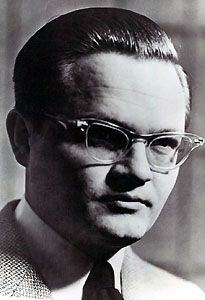
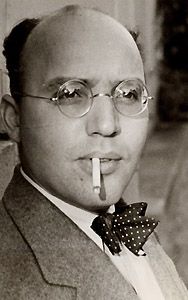
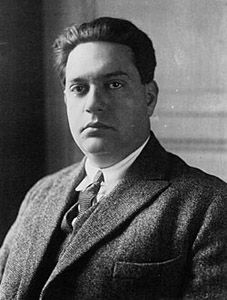
From left to right: Kurka, Weill, Milhaud
Source: Koch International CD (my rip!)
Format: mp3, 320k/s (CBR), DDD Stereo
File Size: 124 MB
Download Link (re-up) – https://mega.co.nz/#!4chlFAZT!VKfBKwnfx7aQ_hHfVhgrjy57mPQ-FroCwwYGdxE_huI
Enjoy! Don’t share!
The Red Detachment of Women (1964) is one of two famous "revolutionary ballets" (the other is
The White-Haired Girl) created under the supervision of Mao Zedong’s wife, the infamous Jiang Qing
(later part of the "Gang of Four") as agit-prop art to entertain and educate the masses during
the Cultural Revolution. It chronicles the rise of a peasant girl to heroic leader of a platoon of female
soldiers. This ballet is still very popular in China, independent of its propagandistic baggage.
Five composers, led by Du Ming-Xin (The Great Wall Symphony) and Wu Zhu-Qiang (who also cooperated
with Du on the non-political ballet The Mermaid), worked on the full-length ballet, of which a characteristic
59 minute suite is presented here. The style is typical Socialist Realism, not unlike the music of Khachaturian.
This was the ballet presented to US President Richard Nixon upon his historic 1972 visit to China.
Music by Du Ming-Xin, Wu Zu-Qiang, Dai Hong-Wei, Shi Wang-Chun, Wang Yan-Qiao
Played by the Shanghai Ballet Theatre Orchestra
Conducted by Lin You-Sheng
"The Red Detachment of Women (simplified Chinese: 红色娘子军; pinyin: H???ngs??? Ni???ngzǐjūn) is a Chinese ballet which premiered in 1964.
It is perhaps best known in the West as the ballet performed for U.S. President Richard Nixon on his visit to China in February 1972. Adapted
from the earlier film of the same title under the personal direction of Zhou Enlai, which in turn adapted from the novel by Liang Xin, it depicts
the liberation of a peasant girl in Hainan Island and her rise in the Chinese Communist Party. The novel was based on the true stories of 100+
member strong all-female Special Company of the 2nd Independent Division of Chinese Red Army, first formed in May, 1931. As the communist
base in Hainan was destroyed by the nationalists, most of members of the female detachment survived, partially because they were women
and easier to hide among the local populace who were sympathetic to their cause. After the communist victory in China, the representatives
of the surviving members were taken to Beijing and personally inspected and praised by Mao Zedong. Most of these surviving members
currently reside in the city of Qionghai (84 survivors in 1994, 23 in 2001, 14 in 2008).
The ballet was later adapted to a Beijing opera in 1964, and as with the ballet itself, both stage and film versions were produced. The 1961 film version
of the ballet made Xue Jinghua (as Wu Qinghua) and Liu Qingtang (as Hong Changqing) superstars along with a dozen other artists who were
cast as protagonists in other model plays of the time. It is one of the so-called eight model plays, the only plays, ballets and operas permitted in
China during the Cultural Revolution (1966–1976). With The White Haired Girl, it is regarded as a classic Chinese ballet, and its music is familiar
to almost every Chinese person who grew up during that time. It was made into a film in 1972 again, and is now part of the permanent
repertoire of the National Ballet of China.
Despite its political overtones and the historical background when it was created, it remains a favorite of music and ballet lovers nearly 30 years
after the Cultural Revolution in China. Many numbers were based on the folk songs of Hainan Island, a place that, with its coconut trees rustling
in tropical wind, evokes much romantic ethos. Though there are unmistakable elements of Chinese music, the music of this ballet was
performed with basically a Western symphony orchestra."
Source: Yellow River CD (my rip! – actually from a Mainland Chinese bootleg)
Format: mp3, 320k/s (CBR), ADD Stereo
File Size: 125 MB
Download Link (re-up by Herr Salat) – https://mega.co.nz/#!1I1CwTKR!dHuCTVCg2jOyoiMzjNv7Kw9Q3VcCLtTD4Qcs6eU 4UNI
Enjoy! Don’t share! 🙂
Although Max von Schillings’s involvement with Nazi music establishment was rather short (he became Director of the
Prussian Music Academy in 1932, joined "the" party on April 1, 1933 and died on July 24 of the same year), it forever
damaged the composer’s posthumous reputation. Cooperating with the regime, von Schillings rigorously "cleaned" the
Academy of all Jewish, Communist and other unwanted composers, including Schoenberg and Schreker, within months.
Von Schillings’s own works are clearly indebted to Richard Wagner: the two tone-poems featured here, Meergru??? and
Seemorgen have the same late-romantic splendor and opulence that characterized the older composer’s orchestral
pieces from his operas (Wagner never wrote symphonies, except two early study symphonies completely uncharacteristic
of his mature style, nor tone poems). The song-cycle, too, is very characteristic of turn-of-the century romanticism.
Music Composed by Max von Schillings
Played by the Rundfunk Sinfonieorchester Berlin
With Robert Woerle (tenor)
Conducted by Stefan Soltesz
"The music of Max von Schillings (1868-1933) has suffered a fate similar to that of the ‘Entartete Musik’ generation,
though because he stood on the opposite side of the ideological/racial divide. As an administrator, he had a direct hand
in carrying out the Nazi’s cultural ‘ethnic cleansing’ at the Prussian Academy of Arts and as a composer had his otherwise
apolitical music reinterpreted in a posthumous biography as being at the heart of nationalist revisionism. These facts have
made dealing with his music difficult in the decades following the war, yet in the early years of the century, he was seen
as a serious rival to Strauss, and his opera Mona Lisa placed him among the post-Romantic ‘progressivists’. Divorcing the
work from the man, then, reveals an original musical mind, occasionally indebted to Strauss, it must be admitted, but an
essential component in German musical developments after Wagner. The tone poems (two rampant seascapes), operatic
preludes and the amazingly varied Glockenlieder song cycle here grow in stature on each hearing and are vibrantly performed
by the Berlin orchestra; W???rle is a strong-voiced exponent of the songs."
Matthew Rye
Source: CPO CD (my rip!)
Format: mp3, 320k/s (CBR), DDD Stereo
File Size: 148 MB
Download Link (re-up) – https://mega.co.nz/#!wIo3RS4Y!Wko0t2lWOcisCaC-LxE2pS79SPZddHm8j3dH1EwIVQU
Enjoy! Don’t share! 🙂
Like George Chadwick, Amy Beach, Horatio Parker and John Knowles Paine, Frederick Converse was one the first American
composers who were trying to establish a national American music, although their own technique was still rooted in mid-centuy
German Romanticism (Mendelssohn, Schumann) or, later, Dvor???k. Converse wrote a number of orchestral poems, of which
three extended ones are featured on this album: Song of the Sea, The Festival of Pan, and the multi-movement American Sketches.
Although he wasn’t able to break entirely free from European models, Converse’s music is nicely crafted and smoothly carpentered.
Music Composed by Frederick Converse
Played by the BBC Concert Orchestra
Conducted by Keith Lockhart
"In the first decades of the 20th century, Frederick Converse (1871-1940) was known as one of the outstanding
American composers of classical music, but his work is largely forgotten today. There is some irony in the fact that these
three pieces are given their premiere recordings by the BBC Concert Orchestra on the British label Dutton, rather than
by American ensemble for a U.S. company. Like most of his American contemporaries, Converse studied in Germany
and developed a Wagnerian, late Romantic style that for a while was the lingua franca of the American musical establishment.
His music doesn’t show the kind of individuality that would make it stand up to that of the most interesting composers
of his time, but he was technically accomplished and a brilliant orchestrator. The first two works on the album, Song of the Sea,
tone poem after Whitman, and Festival of Pan, are proficient and colorful, even stirring, examples of the pictorialism so
pervasive in music of the era. While this might not be the most original music, it can’t be denied that it has a surging energy
that makes it easy for the listener to be carried along. The most impressive of the pieces is American Sketches, three of
whose four movements evoke specific locations: Manhattan, the Mississippi River, and the Grand Canyon. They are appropriately
evocative and seem to have been written out of sense of passion; the large landscapes summon a grandeur that feels entirely
authentic. Keith Lockhart, an American and a specialist in American music, draws excellent, dramatic performances from the
expert BBC Concert Orchestra. Dutton’s sound is detailed, clean, and spacious. The album should appeal to fans of late
Romanticism and anyone interested in the development of Western classical music in America."
All Music
Source: Dutton Epoch CD (my rip!)
Format: mp3, 320k/s (CBR), DDD Stereo
File Size: 140 MB
Download Link (re-up) – https://mega.co.nz/#!1cRWUaCC!TWXylARjhoVcRji4kfhXV1cbBYg2_kJtP2gYXJ9 HRmA
Enjoy! Don’t share! 🙂
Spanish composer Tom???s Br???ton (1850-1923) first gained recognition with a popular zarzuela,
a kind of national variant of European operetta. Vocal music makes up for a large part of this composer’s
legacy, because he always tried to create and establish a special Spanish opera model. At the same time,
he dabbled in symphonic music as a pioneer, too, because there was hardly any such thing in late 19th century
Spain (this was before Alb???niz, Falla and Turina). This album features his folkloristic Andalusian Scenes, along
with In the Alhambra and a collection of opera overtures.
Music Composed by Tom???s Br???ton
Played by the Orquesta de la Comunidad de Madrid
Conducted by Miguel Roa
"Highly esteemed in his lifetime, though sadly neglected since, Bret???n built an enviable reputation on the theatrical music
that he composed between 1875 and 1896. The Preludes to four of his zarzuelas are included on this disc. They take the
form of little symphonic poems which tell the story of the opera in just a few moments of romantic and elegantly scored music.
In a review recently of Bret???n???s Chamber works (Naxos 8.570713) I wrote how disappointed I was because I had the
???expectation that we might have something a little more Spanish in flavour???. Well, this new CD gives us more of an
indication as to where Bret???n was going in his plans to introduce an original, nationalistic opera. In doing so he evolved
a nationalistic style pre-empting Granados, Albeniz and de Falla by only a few years. One could say that Breton was the
father of this great school of Spanish composers.
Of the opera preludes, the one to ???Los Amantas de Teruel??? is the most immediately interesting. It encapsulates a powerful
and lyrical section for the lovers, a battle scene and their meeting in Heaven – all compressed into just over ten minutes.
The story behind ???Garin??? is of a monk in medieval Montserrat. He is accused of raping the daughter of a local count. All ends
well however resulting in the dancing of the Sardana – a Catalan dance. Here I had a shock because back in 2002 when
I was in Perpignan I recorded on video a sardana. I realized that Breton uses the very same tune which I had recorded
over one hundred years later. The informative booklet notes by Victor S???nchez Sanchez tell us that Breton used folk
tunes in other works.
I must add at this stage that the track numbering is incorrect something which Naxos should have picked up on. The
???Garin??? prelude should be track 5 not track 7 which actually is the prelude to Breton???s first opera ???Guzm???n el bueno???.
[see footnote] I started off thinking that this prelude was a Sullivanesque joke, a cousin of Mikado with its mock-Moroccan
melody for the conquest of Iberia and Christian heroic march tune. As it went on it became irritating and dull and
I expect never to play that track again.
The prelude to Bret???n???s longest opera ???La Dolores??? is the shortest on the disc, too short really to make its point.
It comprises a very Spanish mix of melodies and rhythms taken from the opera and ends in a brief ???jota???.
The longest and most interesting work on this disc is the ???Escenas andaluzas (Andalucian Scenes). This is a four
movement tone picture. Bret???n spent much of his life (from 1885) as an orchestral conductor in Madrid. There he
composed, as well as operas and zarzuelas, three symphonies. He was an experienced orchestrator and these skills
of orchestral familiarity emerge fully in this the best work here. One can sense that apart from its intrinsic attractions
it is building a foundation for the music of Albeniz and de Falla. It opens with a colourful ???Bolero???. A ???Polo??? uses an
evocative oboe solo over string pizzicatos to conjure a steamy outdoor guitar. The next ???Marcha y saeta??? is a slightly
comic, processional march set in Holy Week. Its middle section uses the cor anglais to intone a quasi-plainchant saeta –
a devotional song. Finally another Andalucian dance – a lively ???Zapateado??? – brings the piece to a happy conclusion.
I enjoyed the work tremendously. It made me want to get back to that wonderful part of the world as soon as possible."
Music Web
Source: Naxos CD (my rip!)
Format: mp3, 320k/s (CBR), DDD Stereo
File Size: 137 MB (incl. cover scan, booklet)
Download Link (re-upped by Herr Salat) – https://mega.co.nz/#!4FliGahS!ZTS4WSg26uGpcj3KKzdQBH_i2nMfEI60x-gc3VucdXM
Enjoy! Don’t share! 🙂
The role that Tikhon Khrennikov played in the Stalinist music machine (he was head of the Composers’ Union) will
probably never be completely resolved (while he kowtowed to his master he also seems to have protected the composers
against active, live-threatening persecution), as a result, most reports (incl. Shostakovich’s "Testimony") are prone to be
clouded by personal experiences. Be that as it may, Khrennikov himself was not an untalented composer and pianist,
his symphonies and piano concertos reveal a solid craftsmanship and sense of melody, if hardy ever any great originality.
The ballet Napoleon Bonaparte was actually composed after(!) the end of the Soviet Union, thus after Khrennikov’s
administrative career. And while it is certainly extremely conservative as a piece of music that was composed in 1993,
it is fascinating how many influences Khrennikov picked up from fellow composers he’d helped to suppress or at
least officially despised, like Khachaturian, Prokofiev and Shostakovich. However, the ballet also reveals
a fine tunesmith, and if you can ignore the history behind the composer you might find it entertaining.
Music Composed by Tikhon Khrennikov
Played by the Presidential Orchestra of the Russian Federation
Conducted by Pavel Ovsyannikov
"Russian composer Tikhon Khrennikov is probably the most controversial figure in the history of Soviet music.
In his capacity as Secretary to the Union of Soviet Composers, Khrennikov both denounced and elevated the reputations
of his fellow composers, attempting to climb what was apparently a rather slippery slope. As a member of the
Central Committee of the Communist Party and a representative of the Supreme Soviet Council, he was a
Soviet insider of a very high magnitude, and, according to Khrennikov, did what he could to satisfy Soviet
authorities while privately protecting composers and musicians in whom the Secret Police entertained an interest.
Khrennikov studied composition with Mikhail Gniessen at the Gniessen Academy in Moscow and studied piano
with Heinrich Neuhaus; his first major work was his Piano Concerto No. 1 (1932), the first of a cycle of four, the
last appearing in 1991. Khrennikov’s Symphony No. 1 (1935) gained the notice of conductor Leopold Stokowski
and premiered outside Russia; it remains Khrennikov’s best-known work in the West. In 1939, Khrennikov premiered
the opera Into the Storm, the fruits of a three-year collaboration with producer Nemirovich-Damchenko. The enduring
success of this revolutionary-themed, patriotic work established Khrennikov as a major voice in the Soviet socialist
realism style as it applied to music. Khrennikov more firmly cemented this reputation with his Song of Moscow written f
or the film They Met in Moscow (1941), earning Khrennikov his first Stalin Prize; three more would be awarded him in his
lifetime. Khrennikov’s experience with the intrigues of the Soviet political regime came early; during the "Great Terror" in
1937, two of Khrennikov’s brothers were arrested by the Secret Police. While he was miraculously able to save one of them,
the other vanished in the Gulag system.
In 1948, Khrennikov was named Secretary to the Union of Soviet Composers under Andrei Zhdanov, the primary instigator
of socialist realism under Stalin. With Khrennikov’s cooperation, Zhdanov quickly commenced a purge of the Union of Soviet
Composers. During this time, Khrennikov denounced both Sergey Prokofiev and Dmitry Shostakovich, among others, for
practicing compositional styles linked to anti-revolutionary, formalist concepts derived from Western influence; Khrennikov
later stated that he was reading from a prepared speech given to him by the Kremlin. With Zhdanov’s sudden and
unexpected death later in 1948, the situation gradually cooled, but these days are remembered as the darkest in the lives of
both Prokofiev and Shostakovich; biographers of these famous composers have been quick to point to Khrennikov as an
adversarial figure in this crisis.
Nevertheless, Khrennikov held onto his position as Secretary to the Union of Soviet Composers until the position was
dissolved after the breakup of the Soviet Union in 1991. Moreover, a gradual thaw toward musical styles in the Soviet
Union arrived somewhat earlier than in other artistic disciplines; in 1962, arch-modernist Igor Stravinsky was invited back
to the Soviet Union for his first visit since before the October Revolution, mostly at Khrennikov’s behest. Khrennikov also
helped establish the careers of high-grade concert virtuosi such as Mstislav Rostropovich and Leonid Kogan. Khrennikov
himself enjoyed a very active concert career as a pianist, being named People’s Artist of the U.S.S.R. in 1963. In his later
music, Khrennikov adopted some measure of the "modernist" techniques he had denounced earlier in his career as composer,
though these coalesced rather uncomfortably with the "na_ve optimism" (Grove’s) that had characterized his music since the 1930s.
After the collapse of the Soviet Union, Khrennikov was widely vilified by experts on Soviet music as a kind of pariah,
but when pressed about his role in the Zhdanov purges, Khrennikov stated that he had no regrets; he wrote a memoir,
That Is How It Was, in 1994 to answer all such questions, supported by state documents. He continued to compose up
to about the year 2001, producing at least 10 operas; three symphonies; numerous ballets, concertos, and songs; some
chamber music; and 22 film scores, the last genre in which Khrennikov seems to have gathered the most acclaim in his home country."
All Music
Source: Russian Disc CD (my rip!)
Format: mp3, 320k/s (CBR), DDD Stereo
File Size: 150 MB
Download Link (re-up by Herr Salat) – https://mega.co.nz/#!8IkHhTaC!Ka-qAA9TohsA2ouV_p4H-gdnGrAx3llkahu-p_lGXJg
Enjoy! Don’t share! 🙂
Sometime in the late 1950s, an aspiring British pop singer by the name of Arnold George Dorsey was trying to make a
mark in the U.S. and Britain. His agent recommended a name change, and Dorsey picked Engelbert Humperdinck,
the name of a German composer of the late 19th, early 20th century remembered mostly for his fairy-tale opera
H???nsel und Gretel, but otherwise rather obscure. The reason for the name change was that Humperdinck
seemed fairly exotic and bizarre as a stage name, and in fact it might have been the most florid such choice in pop ever.
The original Engelbert Humperdinck was of course a late romantic German composer who was influenced by Wagner.
He specialized in fairy-tale stories. Apart from H???nsel und Gretel, he also wrote music for Die K???nigskinder,
Sleeping Beauty and The Blue Bird. And of all this music is absolutely lovely, as you will recognize
once you’ve downloaded this album. If you like Wagner, Strauss or Korngold, you’ll surely like Humperdinck, too.
Music Composed by Engelbert Humperdinck
Played by the Bamberg Symphony Orchestra
Conducted by Karl-Anton Rickenbacher
"Though Engelbert Humperdinck wrote a great deal of music in a variety of genres,
he is best remembered for a single opera, H???nsel und Gretel (1893), based on the familiar fairy tale.
Humperdinck’s musical style is infused with elements of the German folk tradition, but the composer’s
primary influence was clearly the music of Wagner; indeed, Humperdinck worked as an assistant to
the older master for a time, even providing extra music for a scene change in the premiere staging
of Wagner’s Parsifal in 1882. It is possible that Humperdinck’s music remains, uncredited, as part of
the score that has come down to posterity.
Following a conventional education at Paderborn, Humperdinck entered the Cologne Conservatory at
the age of 18 and began studies in voice and composition. While a student there, he was the winner
of the Mozart Stipend of Frankfurt in 1876; with the aid of its financial award, he went to Munich to
study first with Franz Lachner and then with Rheinberger at the Royal Music School. While enrolled
there (1877-1879), he won an award from the Mendelssohn Foundation of Berlin, following which
he traveled to Italy and had the fortune to meet up with Wagner in Naples.
Written to a libretto by Humperdinck’s sister Adelheid Wette (who added characters and scenes to
expand the little story to operatic dimensions), H???nsel und Gretel was first presented in Weimar in
December of 1893; it was quickly taken up in opera houses all over Europe, representing the perfect
antidote to the chill, veristic winds blowing out of Italy at the time. Ostensibly a work for children, the
opera has always found favor with audiences of all ages thanks to its odd blend of fable-like innocence
and Wagnerian weight. Humperdinck’s succesful blending of a children’s story with his own, rather
monumental, orchestral world has made H???nsel und Gretel the only post-Wagnerian work to be
considered a succesful synthesis of the German master’s style.
During the course of his musical career, Humperdinck supplemented his compositional activities with turns as a
music editor, critic, and, at various times, a music teacher; Wagner’s son Siegfried was one of his pupils.
His other works, particulary the pleasant 1880 Humoreske for orchestra in E major, find occasional
performances today. In the 1960s and 1970s, Humperdinck’s name was again on the lips of the public;
in this case, however, "Engelbert Humperdinck" was the new persona (chosen from a music dictionary)
of a pop balladeer formerly known as Arnold Dorsey, fondly or not-so-fondly remembered for his stagey
rendition of "Release Me." The two, needless to say, are not related."
Source: Virgin CD (my rip!)
Format: mp3, 320k/s (CBR), DDD Stereo
File Size: 140 MB (incl. cover art)
Download Link (re-up by Herr Salat) – https://mega.co.nz/#!dQM0mbBZ!cpKeiTPDa7E0Xufyyb65LV-wB0tjHY5qNcfmU91-VdA
Enjoy! Don’t share! 🙂
Victor de Sabata (1892-1967) was one of the most distinguished opera conductors of the 20th century,
a rival to Arturo Toscanini. The reason why he is far less known today than many of his comptetitors is that
he made far fewer recordings! Sabata thought about himself as being a composer as much as a conductor,
but he left us only a rather small body of work, which is clearly indebted to Ottorino Respighi and Richard Strauss.
The three large-scale symphonic poems recorded here created quite a hoopla when they were first released.
The Night of Plato, Gethsemani and Juventus are superbly crafted and wonderfully orchestrated, really evocative program music!
Music Composed by Victor de Sabata
Played by The London Philharmonic Orchestra
Conducted by Aldo Ceccato
"Blindfold listening tests will thrive on this one, though the fact that Victor De Sahara’s music sounds like
everyone and no-one is enough to raise suspicions that it’s the work of a conductor. Annotator Robert Matthew-Walker
makes the sympathetic claim that hearing these works (they constitute the bulk of Dc Sabata’s orchestral output)
‘enables us to make some kind of restitution towards a more rounded appreciation of the art of a very great musician’.
True, but not a terribly important reason for listening, not unless you’re a student of conductors and
of Victor Dc Sabata in particular.
We’re not told if or when Dc Sabata stopped composing, though we do know that at the time of his death
he was working on a suite made up of earlier material. All three works programmed here are lusciously scored,
with La notte di Platon (The Night of Plato, 1923) approximating the overall shape of Strauss’s Tod and Verkl???rung –
agitation at the start and centre with a serene transformation to close. The subject of the flesh versus the spirit inspires
music that, in addition to the obvious spectre of Strauss, calls on Stravinsky’s Rite, Respighi and possibly Chausson.
Gethsemani has a stronger thematic profile, though its contemplative element is extremely sensual. Again, late-German
romanticism is a sure point of reference thoughjuventus – once championed by Toscanini —has an almost
VTaltonjan exuberance, coloured (near the end) by just a hint of Puccini. Although the earliest work on the disc
(it dates from 1919), it is surely the most original."
Gramophone
Source: Hyperion CD (my rip!)
Format: mp3, 320k/s (CBR), DDD Stereo
File Size: 178 MB (incl. covers, booklet)
Download Link (re-up) – https://mega.co.nz/#!XgAEBL7A!abXLiWGeOM7H72PQb7RuNn-KuuU95CIK2i5yjRLCrn0
Enjoy! Don’t share! 🙂
———- Post added at 09:28 AM ———- Previous post was at 09:24 AM ———-
Quick question: Are people actually reading the short intros and quoted reviews/commentaries, or should I just post the music?
WOW!
No.59
Niels Wilhelm Gade was truly the first Danish composer of any international significance in the romantic age.
A friend of Mendelssohn’s, educated in Germany, it was only natural that his music would closely emulate that
of his friend and other early German Romantics. The three tone poems recorded here, Echoes from Ossian,
A Summer’s Day in the Country and Hamlet reveal typical inspirations for program music in that age: history/mythology,
literature and nature. This will probably be the most conservative music to be presented in the course of this thread,
and if it were film music it could only have been used as "stock music" for a silent movie, when using early romantic
scores was popular, but it’s very pretty music all the same. Holbergiana is a tribute to a playwright.
Music Composed by Niels Wilhelm Gade
Played by the Staatsphilharmonie Rheinland-Pfalz
Conducted by Ole Schmidt
"Here is another CD to swell the growing Gade discography. The Echoes from Ossian Overture has always been
well served on record: it was one of his first works to be recorded in the days of 78s, and there is an alternative
version of the Hamlet Overture, on Chandos (3/96). The special interest of this issue is A Summer’s Day in the
Country and Holbergiana, neither of which is otherwise available. The former is a five-movement piece, pastoral in
character and eminently charming, particularly as played here. The ideas are fresh and the middle movement,
"Solitude of the woods", is touching -as indeed is the delightful "Humoresque" which follows it. Composed for the
Hamburg Orchestra in 1879 it apparently filled them with delight as indeed it did me. Holbergiana was commissioned
for the bicentenary of the birth of the playwright Ludwig Holberg, sometimes known as "the Moliere of the north".
(This centenary also produced a second commission from Grieg, whose outcome was the familiar suite, From Holberg’s
Time, originally written for piano and then subsequently refashioned for strings.) The four movements of Gade’s suite
are all inspired by various Holberg plays, the finale, A l/egrofe.s1/ivo, evoking Maskarade, to which Nielsen turned for
his celebrated opera.
The playing of the Rheinland-Pfalz orchestra under Ole Schmidt is spontaneous, warm and musical. Everyone conveys
a sense of pleasure in what they are doing, and the recording is natural and well balanced."
Gramophone
Source: CPO CD (my rip!)
Format: mp3, 320k/s (CBR), DDD Stereo
File Size: 152 MB
Download Link (re-up) – https://mega.co.nz/#!gRQBkYDC!Se66Gz95LIsvBEfDlZvhn2z8yLsjPyhoHHLIYPt G8OU
Enjoy! Don’t share! 🙂
Robert Raines is a neo-tonal contemporary American composer whose ballet The Return of Odysseus
is based on the Iliad by Homer. It is colorful and varied program music. The CD also features two chamber
works, including a piece for 9(!) flutes.
Music Composed by Robert Raines
Played by The Moravian Philharmonic Orchestra
Conducted by Vit Micka
"Robert Raines’s career has spanned both music and visual arts, creating award-
winning work in both fields. Raised in New York City’s Greenwich Village
by parents who were active in the arts, he was immersed in music, theater,
literature, and the visual arts from an early age. His experience includes
working for a number of years as a guitarist and composer in New York
City, producing as well as performing on many recordings of jazz, blues,
and popular music. He has composed for both theater and film. In 2001,
following an extremely successful period in the graphic arts, he refocused
his energies on music, completing both Masters and Doctorate studies in
composition by 2007.
He’s an active composer and educator, bringing to both endeavors his
trademark enthusiasm and appreciation for artists and students from
diverse backgrounds and disciplines. He has composed a sizeable body of
art music, released several CDs of original compositions, and toured the
United States and Europe. Robert is well versed in the latest music
computer technologies and maintains a state-of-the-art recording studio.
Robert has taught university level courses in theory and composition and
has received a number of prestigious awards and commissions for his
compositions.
Works in progress include a commission from the Brannen-Cooper Fund for
new music for 12 flutes and percussion, and commissions from the UK
group, rarescale, for pieces for quartertone alto flute and electronics, and
a suite for guitar and alto flute. Robert is currently composing a large work
for full orchestra, a string quartet, a flute concerto, and an electro-acoustic
performance piece that will include collaboration with local visual artists."
Source: MSR Records CD (my rip!)
Format: mp3, 320k/s (CBR), DDD Stereo
File Size: 109 MB
Download Link (re-up) – https://mega.co.nz/#!dcJxQJyD!efwNhlXD6Fm73h0_hohweHm-Yx1EoEFKsR8OasAY6SU
Enjoy! Don’t share! 🙂
I agree! I love the type of music you are exposing us to!
No.61
Film music fans need no introduction to Swiss composer Arthur Honegger, whose film scores for Napol???on, Les Mis???rables,
Pygmalion and others is well known. In fact, the final item on this album, Mermoz, is also a suite from a film score
(a different recording of this was uploaded by kobalski earlier this year). But Honegger is probably best remembered for
his short, powerful tone poem Pacific 231, created in admiration for a locomotive! It is one of the key works in
a musical style called "futurism", which enjoyed a brief popularity in the second and third decades of the 20th century
(other pieces include Mossolov’s Iron Foundry and Prokofiev’s Le Pas d’Acier). It is one of three so-called
"symphonic movements". The others, Pastorale d’???t??? and Rugby, are also featured here. Horace Victorieux,
was originally conceived as a ballet, and there’s also a prelude to Shakespeare’s The Tempest.
Music Composed by Arthur Honegger
Played by the Orchestre du Capitole de Toulouse
Conducted by Michel Plasson
"Honegger’s centenary year has deservedly brought his music back into wider circulation, and I welcome these pieces.
While every student knows of Pacific 231, and the charming Pastorale d’???t??? is fairly often played, some of the others are
rarities, and although La travers???e des Andes and Le vol sur l’Atlantique have been recorded recently. Horace victorieux
is new to the catalogue and also to my ears.
This latter work is a "mimed symphony for orchestra", in other words a ballet, although its first performance in 1921
was in concert and it was not staged until 1927. The story, set in ancient Rome and first told by Livy, may be an ancestor
of Romeo and Juliet; it tells of the opposing Horatii and Curiatii families and features a love interest in the person of Horatius’s
sister Camilla, whose love for a member of the other family leads to her death at her brother’s hands. On first acquaintance,
I must confess that this 20-minute score seems to me undistinguished, written in an all-purpose dramatic language and
rather crudely scored. I doubt if it will have lasting interest except to specialists. Yet there are better things that are typical of
Honegger, such as the gently pastoral flute solo at the seven-minute mark, and the work deserves a place in the catalogue.
This performance is polished and persuasive, and indeed, Plasson and his Toulouse orchestra are on strong form throughout
the disc, with Pastorale d’???t??? wonderfully atmospheric. Although inevitably the onomatopoeic element in Pacific 231 makes this
musical evocation of a steam locomotive rough-edged, Plasson’s performance is musicianly and makes a good case for the work.
The same is true of Rugby, which the composer identified as expressing his enthusiasm for the game’s disordered and "distressed
. . . attacks and repulses—though I think it unlikely that it was sung in the Lions’ or All Blacks’ changing rooms! La travers???e des Andes
and Le vol sur I’Atlantique both come from a film called Mermoz (1943): these are related miniature suites of film sequences that
are effective, if not very individual."
Gramophone
Source: Deutsche Grammophon CD (my rip!)
Format: mp3, 320k/s (CBR), DDD Stereo
File Size: 150 MB
Download Link (re-up) – https://mega.co.nz/#!ocwUUaCT!Cg61s0EUuHmab41fa5936QmZzIZNmlXI-18Nuge4j4c
Enjoy! Don’t share! 🙂
May I ask if you could also upload the Honegger film scores you mentionned ? I have also heard much good about his oratorio Jeanne d’Arc au b???cher.
May I suggest Richard Rodney Bennett Symphony no. 3 as another "could-be film music"? I heard it years ago and can assure it’s all you need as far as "cinematic" music is concerned.
No.62
Chinese composer Zhou Long, now based in the U.S., explores various aspects of the
Tang Dynasty in his works: Poems from Tang explores the rhyme and rhythm of poetry,
in which a string quartet assumes the sound of a Qin (a Chinese zither). The Rhyme of Taigu
is a vibrant evocation of the tradition of Chinese percussion instruments, while The Future of Fire
depicts a scene where farms burn off their fields but lose control of the flames. The music mixes Western
and Chinese elements in a haunting, modern yet accessible manner.
Music Composed by Zhou Long
Played by the Singapore Symphony Orchestra
With The Shanghai String Quartet & Singapore Chamber Choir
Conducted by Lan Shui
"Zhou Long (b. July 8, 1953, Beijing) is internationally recognized for creating a unique body of music
that brings together the aesthetic concepts and musical elements of East and West. Deeply grounded
in the entire spectrum of his Chinese heritage, including folk, philosophical, and spiritual ideals, he is a
pioneer in transferring the idiomatic sounds and techniques of ancient Chinese musical traditions to
modern Western instruments and ensembles. His creative vision has resulted in a new music that stretches
Western instruments eastward and Chinese instruments westward, achieving an
exciting and fertile common ground.
Zhou Long was born into an artistic family and began piano lessons at an early age. During the
Cultural Revolution, he was sent to a rural state farm, where the bleak landscape with roaring winds
and ferocious wild fires made a profound and lasting impression. He resumed his musical training in 1973,
studying composition, music theory, and conducting, as well as Chinese traditional music. In 1977, he enrolled
in the first composition class at the reopened Central Conservatory of Music in Beijing. Following graduation in 1983,
he was appointed composer-in-residence with the National Broadcasting Symphony Orchestra of China. Zhou Long
travelled to the United States in 1985 under a fellowship to attend Columbia University, where he studied with
Chou Wen-Chung, Mario Davidovsky, and George Edwards, receiving a Doctor of Musical Arts degree in 1993.
After more than a decade as music director of Music from China in New York City, he received ASCAP’s prestigious
Adventurous Programming Award in 1999.
He has been the recipient of commissions from the Koussevitzky Music Foundation in the Library of Congress,
the Fromm Music Foundation at Harvard University, Chamber Music America, and the New York State Council on the Arts.
Among the ensembles who have commissioned works from him, are the Bavarian Orchestra (Poems from Tang), the
Tokyo Philharmonic (The Future of Fire), the New Music Consort (The Ineffable), the Pittsburgh New Music Ensemble
(Soul and Tian Ling), the Peabody Trio (Spirit of Chimes), and the Kronos, Shanghai, Ciompi, and Chester string quartets
(Poems from Tang). In February 2010, his pioneering cross-cultural opera, Madam White Snake, which was premiered by
Opera Boston, received great critical acclaim. It was given a second performance in Beijing on the 27-October 2010
by the Bejing Philharmonic Orchestra.
A United States citizen since 1999, Zhou Long is married to the composer-violinist Chen Yi. It should be noted that
Zhou is his family name and Long is his personal name, and thus he should be referred to as Mr. Zhou or Dr. Zhou."
Source: BIS CD (my rip!)
Format: mp3, 320k/s (CBR), DDD Stereo
File Size: 153 MB (incl. cover, booklet)
Download Link (re-upped by Herr Salat) – https://mega.co.nz/#!QEthCJqB!eKTyixL6646MqMqxYg4kIwN6nzAnZeSwlPDiPxo bp18
Enjoy! Don’t share! 🙂
One of Honegger’s most famous and enduring works is the "dramatic oratorio" Jeanne d’Arc au Bucher,
in 11 scenes for speaker, solo singers, chorus and symphony orchestra to a libretto by Paul Claudel. I did not have time
to scan the booklet, but you can find a PDF of the libretto from a different performance in the French
original (and a German translation) here: http://www.hymnusiana.org/bachakademie.pdf (from page 8!)
Music Composed by Arthur Honegger / Libretto by Paul Claudel
Played by the Orchestre National de France
With the Choeur de Radio France
And Marthe Keller (speaker)
Conducted by Seiji Ozawa
"’There are passages in some musical works that never fail to bring a lump to my throat: for one, the final pages of
Ravel’s L’enfant et les Sortileges, with its soothing "II est sage …..and the child’s heartfelt cry of "Maman!";
another is the conclusion of this ‘dramatic oratorio’ by Honegger, with its beatific envoi "Greater love hath
no man than this, that he lay down his life for those he loves". I remember being overcome by this, like
many others, at the first English performance (a BBC broadcast in 1947): because of the war the work
had taken all but nine years to reach this country since the first performance (in Switzerland). Even so,
its gestation had been protracted: the idea had been conceived by Honegger and the actressdancer
Ida Rubinstein (for whom he had already written four works) in 1933, but Paul Claudel had at first refused
to write a libretto, feeling that it was not possible to put words into the mouth of a historical figure whose
own words were "engraved on everyone’s memory". Then, astonishingly, he had a vision of two hands
tied and folded in the form of a cross, and in a white heat of emotion wrote his poem in two weeks:
Honegger completed his score at the end of 1935.
The diversity of Claudel’s partly realistic, partly symbolic treatment of the subject ”almost cinematic,
like a long flashback???€”was mirrored in the music, which incorporates all kinds of techniques and styles.
Alongside purely spoken sections (neither of the chief cmracters, Joan and Brother Dominic, sings) there
are choral singing, humming and shouting; and stylistically, besides often elaborate polyphony, the work
contains folksong, Gregorian antiphon, jazz rhythms and baroque dances. The orchestra (in which horns
are replaced by saxophones) includes two pianos and (famously) an Ondes Martenot which, as well as
providing the "dog howling in the night", powerfully reinforces some climaxes???€”blood-curdlingly in the
moments just before Joan breaks her earthly chains.
It is a work of compelling power and, in the final scenes, of almost intolerable emotional intensity, yet
Honegger modestly insisted that his function had been merely to underline Claudel’s precisely indicated
effects: musically he was anxious to make it all "accessible to the common man while retaining the interest
of the musician". Ozawa’s reading certainly brings out the dramatic force of the whole, and except for a
very occasional flaw such as is inevitable in a live performance, the forces under his control do splendidly.
There are no major singing roles, but John Aler is a properly vainglorious Porcus, and mention must be
made of the beautiful voice of Francoise Pollet as the Virgin. Marthe Keller (who initially might have been a
trifle more strongly recorded) makes the most of the name-part and well conveys Joan’s bewilderment,
fervour and agony. Vast as the Basilique Saint-Denis is, the balance and clarity of the recording are
mostly extremely good, calling for praise for the sound engineers."
Gramophone
Source: Deutsche Grammophon CD (my rip!)
Format: mp3, 320k/s (CBR), DDD Stereo
File Size: 146 MB
Download Link (re-up) – https://mega.co.nz/#!QAxy0LAR!SHP9zSH2Jro0vszebr4CBhheAtQfwiwNaNxd1Cr 1EpE
Enjoy! Don’t share! 🙂
Julian Orb???n. His works are in the national-folkloristic idiom to an extent,
but also embrace elements of Coplandia and neo-classicst influences. Woirks presented here are the Three Symphonic
Versions, Symphonic Dances and the non-programmatic, but absolutely adorable Concerto Grosso.
If you like Turina and Falla, you’ll like these, too.
I added the front cover & booklet as a separate upload.
Music Composed by Julian Orb???n
Played by the Asturias Symphony Orchestra
Conducted by Maximiano Vald???s
"Born in Avil???s, Orb???n left Spain with his father in 1940 and both settled in Cuba where he started
his musical studies and composed his earliest works such as his Symphony in C of 1945. That same year,
he was awarded a grant to study in Tanglewood with Aaron Copland. Back in Cuba, he came to disagree
with the Castro r???gime and went into voluntary exile, first in Mexico and later in the States. He died in Miami in 1991.
Orb???n’s musical progress roughly falls into three different periods. His early music certainly reflects
optimism, and remains tonal, colourful and often folk-inflected under de Falla’s influence. The middle
period, to which these three pieces belong, is that of maturity. His music, now rather written under
Copland’s shadow, is less overtly tonal and its emotional scope considerably widens. The final period
is that of disillusionment, and the music becomes more austere and introspective.
Tres visiones sinf???nicas and Danzas sinf???nicas, that are roughly contemporary, have much in common.
The music is colourful, often energetic, rhythmically alert; and very often displays Copland’s influence, as
in the second movement Gregoriana of Danzas which turns a plainsong-like tune into a Coplandesque hoe-down
or in Pavana (the first movement of Tres versiones) in which a pavan by Luis de Milan is turned into another
Copland romp. The slow movements in both works, however, are generally more personal in expression, be it
in the powerful Declamatoria (in Danzas) or the beautiful, meditative Organum (in Tres versiones). Both sets
conclude with virile, colourful dances.
The Concerto Grosso (for string quartet and orchestra) is undoubtedly a major and substantial work for which
I retain an undiminished affection for it is the first Orb???n work I ever heard (in Mata’s recording on Dorian DOR-90178).
This mighty piece in three sizeable movements is clearly the peak of Orb???n’s middle period. If Copland’s influence is
still to be heard, especially in the outer movements, one is also sometimes reminded of Martinů’s sprung rhythms
permeating much of the melodic material. The slow movement is again a most personal utterance, a long slow processional,
often of modal flavour and not without grandeur. It contains some of the most beautiful music ever penned by the composer.
Some years ago, Mata recorded both the Concerto Grosso (Dorian DOR-90178) and Tres versiones (Dorian DOR-90179)
in fine, beautifully recorded readings. The present orchestra may not be in the same class as Mata’s Simon Bolivar
Symphony Orchestra of Venezuela; but I must say that I really enjoyed Vald???s’ committed, urgent readings
which serve the music well.
I urge you to listen to this most welcome and worthwhile release which will hopefully soon be followed
by another all-Orb???n disc by the same forces, for this still underrated composer unquestionably
deserves serious consideration. Recommended."
Music Web
Source: Naxos CD (my rip!)
Format: mp3, 256k/s (VBR), DDD Stereo
File Size: 142 MB (incl. cover, booklet)
Download Link (re-up) – https://mega.co.nz/#!ARIF0SjR!BHLNd3IZugHeDfmBfc-QriPHeWd8oWLFwzUwgXmijMw
Hungarian composer Zolt???n Kod???ly was a contemporary of B???la Bart???k, and like him, he went into
countryside to collect the folk songs of his people. The two composers helped establish a national musical
style which other composers (like Mikl???s R???zsa and L???szlo Lajhta) were to emulate and/or develop.
Unlike Bart???k, Kod???ly never really went down the road to modernism in music, and the three colorful
compositions presented here (the H???ry Jan???s Suite extracted from a singspiel, the Dances of Galant??? and
the Variations on a Hungarian Folksong "The Peacock") are ultimately folkloristic/neo-romantic in style.
The H???ry Jan???s Suite is particularly evocative and makes inspired use of the cymbalon.
Music Composed by Zolt???n Kod???ly
Played by the Chicago Symphony Orchestra
Conducted by Neeme J???rvi
"Hungarian composer Zolt???n Kod???ly is today remembered as much for his contributions to the fields of ethnomusicology
and music education as he is for his own musical creations. Born in 1881, Kod???ly was the son of a local railway station master
and amateur violinist who provided a rich musical environment for his child. Young Zolt???n’s early exposure to the
German classics was tempered by an interest in the folk heritage of his native land; in 1900, after graduating from the
Archiepiscopal Grammar School in Nagyszombat, he enrolled simultaneously at Budapest University (where he studied
Germanic and Hungarian literature) and at the Budapest Academy of Music. Composition studies at the Academy were
fruitful for Kod???ly, and he took a diploma in the subject in 1904. In 1905 he received a second diploma in music education,
and in 1906 Kod???ly crowned his academic career with a Ph.D. earned for his thorough structural analysis of Hungarian
folksong. During the preparation of this dissertation Kod???ly went on the first of many excursions into rural Hungary to
record and transcribe authentic folk music, and in doing so built a strong and lasting friendship with B???la Bart???k (who
was engaged in the same practice at the time, and with whom Kod???ly would go on to publish several collections of
Hungarian folk music).
Kod???ly’s debut as a composer came in October 1906 with a successful performance of his orchestral poem Summer Evening
(Ny???ri este) at the Academy of Music. Two months later Kod???ly left Hungary for the first time, having received funding
from the Academy for a period of study in Berlin and Paris. Upon his return in 1907 he was appointed to the faculty of the
Academy, eventually succeeding his teacher Koessler as professor of composition (and becoming Dohn???nyi’s assistant when
the latter was appointed director of the Academy in 1919). With the creation of the New Hungarian Music Society in 1911,
Kod???ly firmly established himself alongside Bart???k and Dohn???nyi as a powerful force in Hungary’s developing musical culture.
Kod???ly produced a steady stream of music (his most famous works being the opera H???ry J???nos from 1927 and the orchestral
suite from that opera) and important educational works (which have collectively become known to music educators as the
Kod???ly method, and rank in significance alongside similar contributions by Orff and Dalcroze) until his death in 1967. In later
years he made frequent concert tours during which he appeared as a conductor of his own music, though he never abandoned
what he himself considered to be his primary work: the collection and systematization of Hungarian folk music and culture, and
a corresponding assimilation of that body of work into a new Hungarian artistic aesthetic (a goal also shared by his friend Bart???k).
In the years after the Second World War he was honored by countless academic, musical, and political organizations around
the globe; in 1961 he served as president of the International Folk Music Council, and, in 1964, as honorary president of the
International Society of Music Educators."
All Music
Source: Chandos CD (my rip!)
Format: mp3, 320k/s (CBR), DDD Stereo
File Size: 143 MB (incl. cover & booklet)
Download Link (re-up) – https://mega.co.nz/#!Qdo2nQRb!Mn3WUU9Iw0vVgLEqPrDauXtfmzgQv2DxresjHB7 xXAw
Enjoy! Don’t share! 🙂
Make no mistake about it: This is loud music. Really loud music. Really, really loud. Michael Daugherty’s sprawling,
gloriously cinematic, proudly eclectic, cheerfully vulgar Metropolis Symphony is also an example of a "maximalist" composer
who uses every trick in the book, and then some – throws in the kitchen sink, and then the dish washer after it, to entertain his audience.
The Superman music that might have been. And certainly a glorious example of what post-modernism in concert music is all about.
The symphony is "inspired" by the story of Lois and Clark, but it’s not film music. Also included is the short Bizarro for Orchestra,
which is not featured on a re-release.
Music Composed by Michael Daugherty
Played by the Baltimore Symphony Orchestra
Conducted by David Zinman
"Michael Daugherty was born in 1954 in Cedar Rapids, IA. Raised in a family of musicians (his father was a
dance band drummer), Daugherty was subject to many different influences, and began playing keyboards in jazz,
rock, and funk bands. It was these early influences and loves that later informed his formal music writing; his chamber
music and symphonic works alike are based on references to American popular culture, including Elvis Presley,
J. Edgar Hoover, I Love Lucy, UFOs, Rosa Parks, spaghetti Western movies, and Barbie dolls. With these pieces,
Daugherty has risen to be one of the most performed and talked-about composers of his time.
Daugherty received his bachelor’s degree from North Texas State University in 1976. It was there that he composed
his first work for orchestra. He then received a master of music degree from the Manhattan School of Music. Daugherty
left the states on a Fulbright fellowship to attend Boulez’s IRCAM in Paris in 1979. In 1980, he began his final graduate
studies at Yale University. After completing the coursework requirement of the degree, he moved to Hamburg, Germany,
to study privately with Gy???rgy Ligeti.
In 1986, Daugherty received his Doctor of Musical Arts degree from Yale University and was hired to teach composition at
the Oberlin Conservatory. The following year, he came to national attention after winning a Kennedy Center Friedheim award
for Snap, Blue like an Orange! Over the next few years, Daugherty’s music began to be performed all over the United States
and appeared on many recordings. Some of the pieces he wrote at this time were the Metropolis Symphony for orchestra,
Sing Sing: J. Edgar Hoover for 3 Elvis impersonators and string quartet, Bizzaro for symphonic winds, and Dead Elvis for
chamber ensemble. Daugherty received critical acclaim and audience approval for his work including awards and fellowships
from the American Academy of Arts and Letters, Lincoln Center, the Guggenheim Foundation, and the National Endowment
for the Arts.
Daugherty began teaching at the University of Michigan in 1991. Commissions during this period included Jackie-O for the
Houston Grand Opera, UFO for percussionist Evelyn Glennie and orchestra, Spaghetti Western for English horn and orchestra
for the Philadelphia Orchestra, and Hell’s Angels, a concerto for bassoon quartet and orchestra. The Detroit Symphony, as part
of his four-year appointment as composer-in-residence, premiered Motor City Triptych in 2000."
All Music
Source: Decca "Argo" CD (my rip!)
Format: mp3, 320k/s (CBR), DDD Stereo
File Size: 110 MB
Download Link (re-upped by Herr Salat) – https://mega.co.nz/#!xIdklTJY!QnniXmmgSNhmH3QeETQmOBrp23xw-l2FUyVmdxihVFk
Enjoy! Don’t share! 🙂
———- Post added at 05:18 PM ———- Previous post was at 04:26 PM ———-
No.67
This is one of the most consistently intriguing entries in Naxos’ Milken Archive series, featuring three
very different programmatic orchestral works (the monicker "Jewish Tone Poems" is a bit blurry,
as is the label’s designation of all of this being American music), from Avshalomov’s lyrical, straightforward
Four Biblical Tableaux and Sheila Silver’s much more harmonically advanced Shirat Sara to the most ambitious
work here, Meyerowitz’s program symphony Midrash Esther, a powerful work filled with spiky rhythms and
impassioned dissonances (think of a modernised Ernest Bloch, if you will).
Music by Aaron Avshalomov, Sheila Silver & Jan Meyerowitz
Played by The Seattle Symphony and Rundfunk Sinfonieorchester Berlin
Conducted by Gerard Schwarz & Yoel Levi
"Off the beaten path. Naxos once again explores byways unknown to most of us in its by-now extensive American Jewish Music
series of performances from the Milken Archives. I had heard music only by Avshalomov previously, and I didn’t particularly care for it. This I liked a lot better.
I should say while I consider all the composers capable, even quite fine, most aren’t masters in the sense of people like Bart???k, Stravinsky,
Prokofiev, or Hindemith. They don’t write, strictly speaking, necessary music. The question, of course, comes down to whether art must
be necessary in order to claim one’s attention or even love. We’ve all met people who listen only to indisputably great works, with the rest
not worth their time. I don’t necessarily quarrel with this, except to say that such a listening strategy doesn’t work for me. I don’t live on
an exalted plane all the time, just as I don’t live in a neighborhood of architectural masterpieces. I want to know as much of a landscape as I can.
Even a city as great and beautiful as Paris wouldn’t inspire love if it were unrelentingly perfect or grand. All those palaces need the balance of
thousands of modest apartments, boulangeries, and bistros. Furthermore, I need to feel, more often than I care to admit, that I’ve stolen a
moment here and there to waste.
I always associate Aaron Avshalomov with the Pacific Northwest, although he had an unusually cosmopolitan career. The same goes for his son,
Jacob, whom I find the more interesting composer. However, both stand in the enormous shade of Ernest Bloch (whom they both knew), as
did many self-consciously Jewish composers of the first half of the century. Father Aaron took from the "Jewish," rhapsodic style of Bloch’s
Schelomo, while son Jacob tended to follow the "neoclassical" Bloch, from a piece like the Sinfonia Breve. Although both men have something
of their own to say, they don’t say it as compellingly as Bloch. In high school, I went crazy for Bloch’s music — a fascination that has never
left me — and I thought that with a little training, I could write Blochian pieces as well as Bloch himself. Thank God those pieces never got written.
I would have become a less authentic Avshalomov. In fact, I’ve encountered only one composer who composed Bloch as well as the original —
Rebecca Clarke.
The Avshalomov consists of four movements: "Queen Esther’s Prayer," "Rebecca by the Well," "Ruth and Naomi," and "Processional." The movements,
all beautifully orchestrated, run fairly short; don’t expect Richard-Strauss length. Queen Esther prays like a Mittel-Europa cantor, with catches and
appoggiaturas in an essentially vocal melodic line. "Rebecca by the Well," by far the liveliest movement of the four, opens with a gamelan-like orchestra,
similar to Ravel’s "Laidronette" movement from Ma M???re l’ Oye, reminding the listener that Avshalomov resided for many years in China. The bright,
fast music is punctuated by meditative passages. "Ruth and Naomi," another slow movement and my favorite of the four, achieves a noble calm.
This carries over to the start of the "Processional" finale, which switches to triumph. The four movements seem a bit narrow expressively —
three of the four tableaux mine the meditative vein. However, their brevity works for them. They don’t outstay their welcome.
Jan Meyerowitz studied with Zemlinsky, Respighi, and Casella, among others. Born in Germany, he didn’t know he was Jewish (his parents kept
the information from him) until he became a young man and the Nazis gained power. He fled to Belgium and then to the south of France, where
he lived in hiding through much of the Occupation. He finally emigrated to the United States, where he gained a reputation as an opera composer,
collaborating with such eminent writers as Langston Hughes. His symphony, Midrash Esther, uses the outline of cantorial melos much of the time,
but more as a Respighian color, rather than as something inseparably bonded to the music’s conception. It comes closest in idiom to Zemlinsky,
but Meyerowitz writes leaner and meaner. One could also argue whether Meyerowitz has composed a symphony at all. The "dramatic narrative"
takes precedence over any thematic argument. Indeed, you can hear an instinctive opera composer in this work, in the third movement
especially, which depicts Esther revealing the fact of her Jewishness to her husband, the king. One hears at times a dialogue between the two
characters. The work, though well-written, doesn’t get my juices flowing, but that doesn’t mean others will share my apathy.
To me, Sheila Silver’s Shirat Sarah (the song of Sarah) takes best in program. Silver studied with a host of leading lights, including Lig???ti,
Druckman, Seymour Schifrin, Arthur Berger, and Harold Shapero. She doesn’t sound like any of them, although a certain intensity, which I
associate with all these composers, informs her work. The music exhibits a high degree of dissonance, but it’s not atonal. Expertly written
for strings (with first-chair violin taking extensive solos), it has many sources of inspiration, which you can read about in the liner notes.
The title refers to the story of Sarah, who lamented her childlessness and who then conceived Isaac. However, in contrast to the Meyerowitz,
Silver doesn’t attempt to tell a dramatic story, although she writes powerfully and expressively (dramatic in that sense). The piece is
more "about" themes than characters. Silver’s ability to construct an argument sui generis impresses me the most. I’ve listened to this work
a lot in the past month, and I discover something new each time. I don’t pretend to have its measure yet, although it’s not a matter of
understanding the language so much as it is perceiving relationships among movements. I have no idea how to tell a masterpiece with any
reliability, but Silver’s score at least makes me ask the question: if not, why not. I haven’t yet found an answer, a good sign.
Performers do well, with Schwarz better than Levi. Schwarz brings clear shape to his work, and in the Silver, it isn’t easy. Levi has always
annoyed me with a slack approach to rhythm and attack, as well as with a certain amorphousness to the general structure of a piece. And it’s
not as though he compensates (as Solti does, for example) by supplying anything as vulgar as physical excitement. So Meyerowitz may have
gotten a raw deal. I could carp about the tonal strength of Schwarz’s Seattle strings, but they do deliver an undoubtedly insightful account of
a score that tends to keep many secrets.
Classical CD
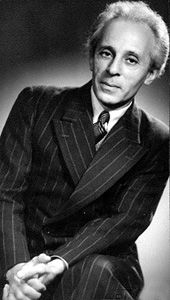


From left to right: Avshalomov, Silver, Meyerowitz
Source: Naxos "Milken Archive" CD (my rip!)
Format: mp3, 320k/s (CBR), DDD Stereo
File Size: 136 MB (incl. scans & booklet)
Download Link (re-up by Herr Salat) – https://mega.co.nz/#!0NdAkKBA!aCe7uFwedmnF9uw6yelK2SZfnRNUaLis8o-zjZuFCBU
Enjoy! Don’t share! 🙂
Normally I’m not a big fan of "projects" like The Women’s Philharmonic, an orchestra entirely comprised of women and
performing the works of women composers exclusively. However, if a composer is twice marginalized by the establishment
(being a woman and an African-American) I do see the point. Except for the direct quotations from spirituals like Deep River, or
Go Down Moses, there is little intrinsically "African American" about Florence Price’s neo-romantic music, although it
does have a distinctly Southern "slang" to it. The Symphony No.3 is a pleasant, alternately lyrical, comical and dramatic,
while The Oak is a rather solemn symphonic poem. The most attractive work may be the Mississippi River Suite,
which extensively quotes from folk songs and spirituals.
Music Composed by Florence Price
Played by The Women’s Philharmonic
Conducted by Apo Hsu
"When her Symphony No.3 was played by the Chicago Symphony in 1940, Florence Price became the first African-American
woman composer to be performed by a major American orchestra. Most of her music came in the smaller domestic genres of
piano pieces and songs (performed by some of the top singers of her day), but she also wrote four symphonies and the two
orchestral works which round out this disc. Mississippi River Suite is an arrestingly orchestrated medley of folksongs
(in settings emotionally intimate, for the most part, rather than grandiose), but she proudly incorporated African-American
dance and blues idioms into her abstract works as well, such as the Symphony. Fresh, richly tuneful, unsophisticated in the
best sense, and joyous, Price’s music is here played with brio and conviction by the San Francisco-based Women’s Philharmonic
under Apo Hsu."
eMusic
Source: Koch International CD (my rip!)
Format: mp3, 320k/s (CBR), DDD Stereo
File Size: 160 MB
Download Link (re-up by Herr Salat) – https://mega.co.nz/#!cZlWmDSD!EUIcehuQwmmpNtWfkXc_11d1QiJdzcgiyW473Pm U4GI
Enjoy! Don’t share! 🙂
Walter Leigh was an English composer whose life was cut short when he was killed in action by German forces at Tobruk
in WWII. He hadn’t yet found his personal idiom, so we’re left with a small body of work that is stylistically all over the place,
but nicely crafted. This album of orchestral works includes a ceremonial overture Agincourt, which is not far from
William Walton’s music for the Olivier Shakespeare films. There’s also incidental music to a performance of
A Midsummer Night’s Dream (in 1936 Germany, ironically) and two short pieces from another theatre score, The Frogs.
The non-programmatic Concertino for Harpsichord is neo-classical in style.
Music Composed by Walter Leigh
Played by the London Philharmonic & New Philharmonia Orchestras
Conducted by Nicholas Braithwaite
"Walter Leigh’s discography has seldom extended, at any one time, much beyond the Harpsichord Concertino,
a favourite piece for many years. Thus the present issue forms a remarkable and very welcome extension of that discography.
In a perceptive and informative sleeve-note Hugo Cole points out that in Leigh’s relatively short life (he was killed in
his thirties fighting at Tobruk) he chose not to teach (a choice which many teachers will understand!), but instead to
live by seeking and accepting composing commissions. As a result, much of his music needed to be fitted to an occasion,
and quite often the occasion involved orchestras consisting wholly or partly of amateur players. To this situation Leigh
always responded in the most professional of ways, using his own writing skill to produce music which made the right
sound without demanding too much of his players in the way of their own performing skill. No doubt some pressurization
in this direction came from Leigh’s teacher Hindemith, whose own skill in that particular direction, as well as a hundred
others, would not have been lost On his pupils.
Schools provided one such occasion in 1936: incidental music for a combined schools production of A Midsummer Night’s Dream
in Weimar. The production took place in the open air, where a small string-based orchestra (including a harpsichord!) can
hardly have sounded at its best. But that is no problem on this present occasion, when the music will here and there probably
remind the listener of Mendelssohn without actually replacing him. Also in 1936, a university made a request: Cambridge wanted
music for one of its series of productions of Greek plays, on this occasion Aristophanes’s The Frogs ("brekke-kekex ko-ax ko-ax"
I think the frogs commented). This time a somewhat larger orchestra in a somewhat smaller and enclosed auditorium, and again
the music in its present circumstances comes up well, though the excerpts chosen are instrumental ones only. Similarly, the
Music for siring orchestra makes only very modest demands, and so does the Harpsichord Concertino (which indeed with its
alternative piano soloist could make an excellent short concerto for a school orchestra concert very much more often
than it is allowed to).
The LPO is no school orchestra (though I think it will have few members who did not once happily—reasonably happily—play in one).
But on this occasion it applies itself entirely rewardingly to committed professional performances of the music concerned, as of course
does Trevor Pinnock to the harpsichord part of the Concertino. Indeed, the exuberance of the string playing in this piece causes
balance problems occasionally: some of the soloist’s accompanimental figurations do retire very much into the background.
This is for a few bars of many thousands; the excellence of the recording (including its balance) elsewhere allows the unqualified
recommendation of this most enterprising record."
Gramophone
Source: Lyrita CD (my rip!)
Format: mp3, 320k/s (CBR), ADD Stereo
File Size: 111 MB (incl. booklet)
Download Link (re-up by Herr Salat) – https://mega.co.nz/#!dUVXEJqJ!dizeRiHJbjAuoQxGrwZaChCgatkjl6wFZEMtjLM EC3g
Enjoy! Don’t share! 🙂
American neo-romantic composer and concert pianist Edward Joseph Collins wrote quite a lot of music, most of which
remained unknown in his lifetime. In the early years of the 2000s, Albany Records embarked on an ambitious 10 CD project
featuring the composer’s orchestral, chamber and vocal music. This CD, Volume 7, includes a suite from the ballet
The Masque of the Red Death, an Irish Rhapsody and A Set of Four (character pieces). The Albany
albums were released to general acclaim and have done much to redress Collins’s neglect.
Music Composed by Edward Joseph Collins
Played by the Royal Scottish National Orchestra
Conducted by Marin Alsop
"Boy is this sexy! The ballet suite The Masque of the Red Death gives Strauss’ Salome
a very good run for its money in the decadence department. I mean, just look at the five
movement titles (which naturally are in French): Invocation Profane; Propos subtil et mysterieux;
Valse seduisante; Chez le Sultan; and Orgie (of course!). If this isn’t self recommending to all lovers
of over-the-top late-Romantic extravagance then nothing ever will be. Collins’ music is wonderfully
lush and beautifully scored, and the contrast between this late work and the earlier, simpler Irish Rhapsody
establishes him as something of a stylistic chameleon. Collins in fact wrote several “Irish” works and they
run like a thread through his musical career, the present example being far more straightforwardly tuneful
though no less well crafted than his later output.
Set of Four is a group of three miniatures (Prelude, To Her, and Passcaglia) surrounding a large, gorgeous
second movement evocatively titled Moonlight and Dance. Like the ballet suite, this is harmonically rich, opulent,
sophisticated music composed by an artist with a sure sense of style and (what’s even better) a good sense of
timing. All of these works deserve to be played and savored by music lovers. As with previous entries in this series,
Marin Alsop gets very impressive results from the Royal Scottish National Orchestra, with whom she also is
working on Naxos’ Barber series. They seem to have a very good working relationship, and the players vividly
characterize music that sometimes risks becoming harmonically elusive (think Delius with rhythm). Certainly
these performances do the composer proud, and they are extremely well recorded. You may very well find this
to be one of the most enjoyable novelties to come along in quite a while."
Classics Today http://i1084.photobucket.com/albums/j415/wimpel69/p10s10-1.gif
Source: Albany CD (my rip!)
Format: mp3, 320k/s (CBR), DDD Stereo
File Size: 125 MB (incl. booklet)
Download Link (re-up) – https://mega.co.nz/#!4chAWLKA!AfNC6TkOrLtssYAdkfk7Wm3L9Ikjw00CKgE7cJj-niQ
Enjoy! Don’t share! 🙂
———- Post added at 11:06 AM ———- Previous post was at 10:58 AM ———-
No.63 (by request)
One of Honegger’s most famous and enduring works is the "dramatic oratorio" Jeanne d’Arc au Bucher,
in 11 scenes for speaker, solo singers, chorus and symphony orchestra to a libretto by Paul Claudel. I did not have time
to scan the booklet, but you can find a PDF of the libretto from a different performance in the French
original (and a German translation) here: http://www.hymnusiana.org/bachakademie.pdf (from page 8!)
Music Composed by Arthur Honegger / Libretto by Paul Claudel
Played by the Orchestre National de France
With the Choeur de Radio France
And Marthe Keller (speaker)
Conducted by Seiji Ozawa
more strongly recorded) makes the most of the name-part and well conveys Joan’s bewilderment,
I like this version better.
Austro-German Karol Rathaus was one of those unluck composers whose music the Nazis deemed "degenerate" (entartet),
and he had to emigrate to the United States to save his life. His music is expressionistic in style, the ballet The Last Pierrot
presented here (along with the Symphony No.1) is one of his finest works.
Music Composed by Karol Rathaus
Played by the Deutsches Sinfonie-Orchester Berlin
Conducted by Israel Yinon
"Karol Rathaus was one of those indirect victims of Nazism that Decca’s Entartete Musik series has been so indispensable in rediscovering.
Polishborn, he was briefly very successful in pre-war Germany (an opera was premiered by Bruno Walter; Furtw???ngler and Horenstein also
took him up). Seeing the way the wind was blowing he left Germany the year before Hitler came to power, wrote film music and a ballet in
Paris and London but found few openings and fewer performances in America, where he eventually settled.
The First Symphony (there are two others) was roundly abused at its premiere in 1926; this recording is its first performance since then,
and the composer – not yet 60— went to his early grave believing the score to be lost. It is a prodigiously inventive work, 40 minutes long
though in only two movements, in a frowning, sinewy postromantic style that might remind you just a little of the symphonies of Honegger
or of the more austere pages of Martin/i. The thematic language, though, is much closer to the Viennese tradition and its roots in Mahler,
Reger and (Rathaus’s teacher) Schreker are clearly perceptible. But it has an individual emotional vein, often grim, sombre or shadowed,
rising at times to a bitter eloquence that is very striking; orchestrally, too, it is highly accomplished. According to an accompanying note
Rathaus was frightened by the reaction to the work and by the anti-Semitism of some of his critics; it is hard not to hear some such
prejudice in dismissals of the symphony as ‘atonal’. It is no such thing, and although many of its melodies are angular and some of its
dissonances harsh, it is by no means especially innovative for its period.
Even so, Rathaus apparently changed his style soon afterwards. Not radically, if his ballet The last Pierrot is anything to go by. Its melodies
are sometimes smoother; no doubt association with dance added an element of grace to his manner, but the music is evidently by the
same composer as the symphony. Jazz elements are introduced (and adroitly used to convey real menace at one point) and there is a
violent forcefulness that aptly reflects the plot – this is a Pierrot in modern times, seeking his Columbine among factories and dance halls.
It is effective and was for a while very popular. But it is the Symphony that whets one’s appetite for more of this impressively gifted composer’s
music, especially in such eloquent performances as these. The Symphony is a tough piece to bring off— it had to wait five years for its premiere,
because conductors were scared of it but Israel Yinon has its full measure. I look forward to future recordings by him as eagerly as I do to
more music by Karol Rathaus."
Gramophone
Source: Decca CD (my rip!)
Format: mp3, 320k/s (CBR), DDD Stereo
File Size: 176 MB
Download Link (re-up by Herr Salat) – https://mega.co.nz/#!oR80TZha!Bb-dk0ct7DQYyMus-KSFoUrZPNsQ3DxhYZohz573Evs
Enjoy! Don’t share! 🙂
Also, SATIE! YES! This pleases me. :3
Japanese composer Shiro Fukai (1907-1959) was primarily influenced by French music early in his career (the French titles
for the different works on this album might indicate that), but his style evolved towards Stravinsky.
A very prolific film composer virtually unknown outside of Japan, Fukai composed a ballet, Cr???ation, based on Japanese
mythology, and a Chants de Java, a symphonic poem that builds to a powerful crescendo. His style is a bit more
genteel than, e.g., Akira Ifukube’s music (Sinfonia Tapkaara), and a little "French polish" is always in evidence.
Music Composed by Shiro Fukai
Played by the Russian Philharmonic Orchestra
Conducted by Dmitry Yablonsky
"Japanese composer Shiro Fukai was apparently better known in his native
country for his nearly 200 film scores than his classical compositions, though he was thought
of highly enough to be among those receiving a commission in celebration of the 2600th Year of the
Emperor (not a single emperor, of course, but the anniversary of Imperial rule) in 1940. The resulting
work, a ballet score entitled Cr???ation , is included here. Illustrating several Japanese creation myths
and concluding in the (then) present, the music does adapt at least one traditional mode from the
ages-old court music gagaku , though the primary impression it makes is not via styles indigenous to
the island, but rather Ravel and early Stravinsky. Fukai’s Francophilia is audible in the rest of this program
as well; his Parodies are dedicated to Falla, Stravinsky, Ravel, and Roussel, respectively, and though not exactly
mimicry, they touch on enough points of stylistic similarity to suit the title. Program annotator Morihide Katayama
characterizes Fukai as a Modernist, but one that avoided the adopted artistic "savagery" of early Modernism
(and the starkness of traditional Japanese folk and court musics) in favor of a French-influenced manner of
sweetness and light. This may account for Fukai?s renaming one of the movements from an earlier version of the
work, changing the dedication from Bart???k to Roussel, apparently without altering a note of the music.
(A movement dedicated to Malipiero was removed completely.) Though Katayama also cites Bolero as an
influence on the Songs of Java ?s gradual crescendo, Fukai’s colorful orchestration outdoes even Ravel,
with chiming percussion reflecting Javanese gamelan, a brief but prominent part for saxophone, and even
something approaching an insistent jazz riff in the brass. (In a curious editorial gaffe, Naxos labels both
Cr???ation and Songs of Java as "World Premiere Recordings", though Katayama’s notes mention a recording
of the latter being popular in wartime Japan.)"
Fanfare
Source: Naxos CD (my rip!)
Format: mp3, 320k/s (CBR), DDD Stereo
File Size: 112 MB (incl. cover & booklet)
Download Link (re-up) – https://mega.co.nz/#!VFBCDADT!HZ35HFGQtz5IKYuxAT1gIE_ZNMsJgtu1S5g3vTa pBIQ
Enjoy! Don’t share! 🙂
Takashi Yoshimatsu also hails from Japan (but is different from Fukai in almost every other respect). He mostly
lives and works in the United Kingdom. Like one of the great composers of the 20th century, Olivier Messiaen,
Yoshimatsu is fascinated with birds, their nature as well as their poetical and mythological "properties".
The two works on this album are a case in point: the Kamui-Chikap Symphony, which deals with all kinds of sounds,
but is organized in five movements inspired by the dances of the god Shiva. The title of the symphony means "God Bird".
Whereas Messiaen’s "bird music" is often elusive and pointilistic, Yoshimatsu’s is dynamic, extremely colorful and very accessible,
although he uses every trick in the book know to the Western avantgarde. It’s a wild mix of different influences, and does
not shy away from pop/rock quotations either. The Ode to the Birds and Rainbow was inspired by the final words the
composer’s sister said on her deathbed: "The next time I’m born I would like to be a bird". She had been listening to an
album of bird songs before her death.
Music Composed by Takashi Yoshimatsu
Played by the BBC Philharmonic Orchestra
Conducted by Sachio Fujioka
"Chandos have signed up a new Composer-in-Residence, Tokyoborn Takashi Yoshimatsu. The BBC Philharmonic under the
composer’s countryman, Sachio Fujioka, have already given us one disc of Yoshimatsu’s music, containing the Second Symphony,
Guitar Concerto and Threnody to Toki (6/96). Last May, at the helm of the Manchester Camerata (of which he is Principal Conductor),
Fujioka recorded a second volume devoted to the half-hour Piano Concerto and four shorter pieces.
Sitting in the control room of BBC Manchester’s Studio No. 7 listening to the delicately serene progress of While an Angel Falls into a
Doze, a single phrase suddenly reminds me of Sibelius and the Sixth Symphony in particular. When I mention this to Yoshimatsu
afterwards, he beams from ear to ear. "I’m amazed and delighted you sensed that! You know, it was after hearing a performance of
Sibelius’s Sixth many years ago that I decided to become a composer. I adore the limitless horizons and wide open spaces of Sibelius’s
music: Tapiola was another seminal work for me. Tchaikovsky is also a hero of Signed up as Chandos’s composer-in- residence,
Takashi Yoshimatsu has just released his second disc – recorded in Manchester Photo Chandosl Hansen mine, and Shostakovich too:
"I love the dark intensity and concentration of the Tenth and Sixth Symphonies especially. But my tastes and influences go far wider:
jazz, traditional Japanese gagalat music, British rock music — The Beatles, Pink Floyd, Yes, Queen … even Oasis."
Born in 1953, Yoshimatsu learnt the piano as a child but initially studied to be an engineer. He taught himself composition, was a pupil of
Teizo Matsumura (b.1929) and has also performed in a variety of rock and jazz bands. How would he attempt to define his own music?
"Well, I suppose you could say there’s a spiritual aspect there, but I love drama and passion too. Rhythm "Back in Japan," explains Fujioka,
"Takashi’s beliefs are not shared by his contemporary colleagues, all of whom reject tonality and write very intellectually. Those kind of
pieces are just for specialist audiences: they don’t speak to the public like, say, the finale of Beethoven’s Choral does. On the surface, a piece
like Takashi’s Piano Concerto sounds very beautiful. But if you really listen hard, there’s so much activity. I think in this work Takashi also
wanted to set himself a specific challenge of writing for a Mozartsize ensemble; that in itself requires a special discipline. Clarity of texture is
important to him: he has a sophisticated ear. The Camerata produces a clean, tight, classical sound, but there are times when Takashi’s
music demands quite the opposite of that."
Gramophone
Source: Chandos CD (my rip!)
Format: mp3, 320k/s (CBR), DDD Stereo
File Size: 135 MB (incl. cover & booklet)
Download Link (re-up) – https://mega.co.nz/#!cBgEkb4J!YgivYHEnb2wvm2G704MkGERoa5kBqoVhYNeTpIu pNJw
Enjoy! Don’t share! 🙂
———- Post added at 11:25 AM ———- Previous post was at 10:28 AM ———-
No.74
Austrian composer Karl Weigl once served as a kapellmeister under Arnold Schoenberg, and the older but more advanced
composer always admired him for his fine craftsmanship. Weigl never left tonality behind, and in fact his idiom is rather closer
to that of Franz Schmidt (escpecially the latter’s 4th Symphony). Like many of his countrymen, Weigl had to emigrate to the U.S.,
and like fellow emigr??? Erich Wolfgang Korngold, he dedicated a symphony to President Roosevelt. The Apocalyptic Symphony, his
fifth, is a sprawling, sumptuous, epic work that any addict of Vienna turn-of-the-century music will love and admire, even if it was
composer rather late for that kind of style. Cast in four movements (Evocation, The Dance around the Golden Calf, Paradise Lost and
The Four Horsemen of the Apocalypse), it is appropriately tumultuous and dynamic.
Music Composed by Karl Weigl
Played by the Rundfunk Sinfonie-Orchester Berlin
Conducted by Thomas Sanderling
"Karl Weigl’s music demonstrates once again that the great Austrian/German symphonic tradition did not die
with Mahler, but continued to thrive well into the 20th century. Weigl (1881-1949) worked under Mahler in Vienna
and enjoyed a fine reputation until, as we’ve heard often by now, the Nazi seizure of power, which forced his emigration
to America where he died in comparative obscurity. He nevertheless composed a substantial body of orchestral and
chamber music, including six symphonies. If this one is typical, it’s a legacy that urgently calls out for wider exposure.
Composed in 1945 and dedicated to the memory of President Roosevelt, the “Apocalyptic Symphony” received its
premiere in 1968 under Stokowski. Although a couple of private tapes of that and at least one other performance exist,
neither gives much sense of the impact that this magnificent work can have in concert. This splendid recording does.
Weigl’s music offers the tonal richness and harmonic complexity of Franz Schmidt, with a healthy dose of Mahlerian irony
and a brittle humor that calls to mind Berthold Goldschmidt. The symphony opens with a marvelous gesture: over the
sounds of the orchestra tuning, the trombones blast out the first movement’s principal theme. Order having thus been
established out of chaos, the music moves purposefully through a variety of predominantly dark moods to a stern conclusion.
The scherzo, subtitled “The Dance around the Golden Calf”, has a certain oriental quality, but much more noteworthy is
its thematic workmanship, particularly the return of the trio section in a fortissimo outburst toward the end. The Adagio,
headed “Paradise Lost”, must be ranked among the finest slow movements since Bruckner, whose rapt serenity and spiritual
loftiness it effortlessly recalls. Get this disc for this movement alone: it’s a perfect example of music both of a specific tradition
and effecting a new step forward for that same tradition. Distinguished by haunting melodies, evocative orchestration, and
superbly gauged climaxes, it also confirms just how well trained this entire generation of composers really was, particularly
in the confident use of a large and varied orchestra.
The finale, “The Four Horsemen”, is not what the title might lead you to expect, and it serves to caution listeners to pay
attention to the music rather than to external descriptions. We’ll never really know exactly what this appellation may have
meant to Weigl, but I have already seen a couple of stupid comments in print by “critics” who observe that the music
doesn’t “sound” to them like the Four Horsemen of the Apocalypse, as if they would know! What matters, of course, is
whether or not what Weigl actually composed works as the finale to his Fifth Symphony–and about that there can be no
question. What we have here is a bitterly ironic march, leaving no doubt that Weigl sees the apocalypse in question not as
a spiritual happening, but as man-made event. For 10 minutes the music marches on, pausing once for a glimpse back at
Paradise Lost before the pealing of bells announces a conclusion as ambiguously triumphant as that of any Shostakovich
symphony. It’s an inexorably “right” conclusion to a remarkable work.
The Phantastisches Intermezzo began life as part of the composer’s Second Symphony, but soon acquired an independent
existence. More lightly scored than the Fifth Symphony, it’s a brilliant exercise in contrast, particularly with respect to chromatic vs.
diatonic harmony. Scurrying wind figures and bustling strings alternate with Romantic-sounding brass fanfares. It’s a delight.
Weigl’s orchestration shimmers brilliantly, and there’s absolutely nothing quite like it by anyone else.
The Berlin Radio Symphony and Thomas Sanderling deserve special credit for their effervescent performance of this
gossamer-textured, extremely rapid and tiring piece. But then, they play both works with tremendous commitment.
Sanderling clearly understands the special emotional world that the symphony’s Adagio inhabits; he and his players deliver
the music with a hushed intensity that, more than any other factor, sets the seal on Weigl’s claim to musical greatness.
Thrilling recorded sound, warm yet clear, captures the music’s complex textures with tactile immediacy. Don’t miss this
stunning new release. Buy it, and send a signal to BIS that we want more!"
Classics Today (DISC OF THE MONTH) http://i1084.photobucket.com/albums/j415/wimpel69/p10s10-1.gif
Source: BIS Records CD (my rip!)
Format: mp3, 320k/s (CBR), DDD Stereo
File Size: 138 MB
Download Link (re-up) – https://mega.co.nz/#!cUQ2mIZa!OKdvdw9L5X7JI1rP_tcyrw46U04UfGk2tSiL1ec MAyY
Enjoy! Don’t share! 🙂
French composer Georges Auric is of course well known in film music "quarters", especially for the droll
scores he wrote for several Ealing Studios comedies in the 1950s. But he was also a member of the important
group "Les Six", which also included Arthur Honegger, Darius Milhaud & Francis Poulenc.
Featured on this album are two ballet scores, Ph???dre and Le Peintre et son Mod???le.
Music Composed by Georges Auric
Played by the Orchestre Philharmonique du Luxembourg
Conducted by Arturo Tamayo
"Martin Kahane’s notes pay Auric the tribute of giving us no biographical background
on Auric except his involvement in these two ballet scores. It is as if we already know that
he was born in Lod???ve, H???rault in France. A pupil of D’Indy he was at first strongly influenced
by Satie. As his individuality grew so he became recognised alongside Durey and Honegger as
part of Les Six. We know Auric now because of his film music of which there are collections on
both Chandos and Marco Polo. In fact in addition there are fourteen ballets written between
1923 and 1952 as well as some chamber music, songs, piano solos and a clutch of orchestral works.
Across the fifteen movements of the music for the Ph???dre ballet Auric proves himself an adherent
of a stern and gaunt tonality at times like Barber’s Medea ballet music. There is much that is thunderously
emphatic with the message hammered home with tragic intensity as for example in the Danse Fun???bre
which is more march than dance. The boiling euphoric tension of this music passingly recalls that of
Igor Markevitch although Auric always manages to find a more yielding humane accent. His music is also
softened by his evident admiration for Ravel’s methods. There is also a Bliss-like abandon about some of
the more lively writing as in Danse de joie. The tragic element gripes and shudders especially in the
Despair and Fury of Theseus and the Death of Ph???dre but even in that last scene Auric writes much
that is tender, gentle and imbued with consolation.
Le Peintre et son Mod???le is another ballet written one year before Ph???dre. This is much shorter and has
only seven scenes. Understandably the score is in much the same language as Ph???dre except that the
jagged tragic element is not as evident. Other moods are in play here including the waltz, an absurdist
agenda (like something from Prokofiev’s Love of Three Oranges) and a glittering and starry enchantment
in the last movement; contentedly magical writing.
Revelatory experiences here with Auric presented in a new light. Lovely music bound to please those
already enthralled by Markevitch, Stravinsky and Bliss."
Musicweb Web
Source: Timpani CD (my rip!)
Format: mp3, 320k/s (CBR), DDD Stereo
File Size: 118 MB
Download Link (re-up) – https://mega.co.nz/#!pE4FxCyK!HiQFskbb7Jo38nnE1-elOnWgNWpOaZL-TChfb9w7rw8
Enjoy! Don’t share! 🙂
As you have already posted some Behzad Ranjbaran : would you happen to have his Cello Concerto ? I have been looking for it for a while, in vain…
Thank you very much whatever the answer.
By the way, from Sibelius, I strongly recommand his First Symphony (Vanska cond.), which is gorgeous, and his tone poem Luonnotar, for Soprano and Orchestra. 😉
I haven’t really heard Sibelius yet, so that’s why I’m eager to get some of his symphonies. :3
The reason I’m especially interested in the Fifth is because I was reading a music blog and the author stated how Sibelius’ Fifth Symphony pretty much ‘saved’ his life. He listened to it non-stop during a particularly bad time in his life, and it helped him get through it. I know I could probably look it up right away on Youtube to hear it, but I’d rather be patient first and see if Wimpel (or anyone else frequenting this thread) has recordings of it to share.
But first:
No.75
Samuel Barber is best known for his Adagio for Strings and his perfectly lovely Violin Concerto. He didn’t write
a lot of programmatic music (in fact he didn’t write a lot of music altogether), but his ballet Medea (originally: Cave of the Heart)
is one of his strongest works. While the original ballet was composed for a small ensemble (like the other ballets commissioned by Martha Graham),
the suite recorded here was re-arranged by the composer for full symphony orchestra. Also included are his Third Essay for Orchestra and
Fadograph of a Yestern Scene, inspired by a quotation from James Joyce’s Finnegan’s Wake.
Music Composed by Samuel Barber
Played by the New Zealand Symphony Orchestra
Conducted by Andrew Schenck
"The score of Medea was commissioned by the Ditson Fund of Columbia University
for Martha Graham and was first danced by her and her company at the Macmillan Theater
of Columbia University in May of 1946. Miss Graham uses the title Cave of the Heart for her
ballet, but the composer has preferred to use the original source of the idea as the title for
the suite for full orchestra. The score is dedicated to Martha Graham.
Neither Miss Graham nor the composer wished to use the Medea-Jason legend literally in the ballet.
These mythical figures served rather to project psychological states of jealousy and vengeance which are timeless.
The choreography and music were conceived, as it were, on two time levels, the ancient mythical and the
contemporary. Medea and Jason first appear as godlike, super-human figures of the Greek tragedy. As the
tension and conflict between them increases, they step out of their legendary roles from lime to time and
become the modern man and woman, caught in the nets of jealousy and destructive love; and at the end
reassume their mythical quality. In both the dancing and music, archaic and contemporary idioms are used.
Medea, in her final scene after the denouement, becomes once more the descendant of the sun.
Beside Medea and Jason there are two other characters in the ballet, the Young Princess whom Jason marries
out of ambition and for whom he betrays Medea and attendant who assumes the part of the onlooking chorus
of the Greek tragedy, sympathizing, consoling and interpreting the actions of the major characters.
The suite follows roughly the form of a Greek tragedy. In the Parados the characters first appear. The Choros,
lyric and reflective, comments on the action which is to unfold. The Young Princess appears in a dance of freshness
and innocence, followed by a heroic dance of Jason. Another plaintive Choros leads to Medea’s dance of obsessive
and diabolical vengeance. The Kantikos Agonias, an interlude of menace and foreboding, follows Medea’s terrible
crime, the murder of the Princes and her own children, announced at the beginning of the Exodus by a violent
fanfare of trumpets. In this final section the various themes of the chief characters of the work are blended together;
little by little the music subsides and Medea and Jason recede into the legendary past."
Samuel Barber
Source: Koch International CD (my rip!)
Format: mp3, 320k/s (CBR), DDD Stereo
File Size: 114 MB
Download Link (re-up) – https://mega.co.nz/#!lJAwHL6Q!aMZNchr_BGv1xEWsFNy5RXSqF0xQoSmgqRbLYhP n5Xk (re-upped!)
Enjoy! Don’t share!
———- Post added at 09:32 AM ———- Previous post was at 08:42 AM ———-
No.76 (by request)
The Finnish saga of the Kalevala fascinated Jean Sibelius all his life, and he wrote several
works depicting events and characters from this epic tale. The Lemminkainen Suite, also known as
Four Legends from the Kalevala, is a cycle of four tone poems that may be performed together
or independently. In fact, The Swan of Tuonela is by far the most popular of the four, and
often performed on its own. Two further tone poems, Pohjola’s Daughter and Night Ride and Sunrise
complete this wonderful album conducted by Neeme J???rvi, a life-long champion of Sibelius.
Music Composed by Jean Sibelius
Played by the Gothenburg Symphony Orchestra
Conducted by Neeme J???rvi
"The Lemmink???inen Suite is a work written by the Finnish composer Jean Sibelius in the early 1890s which forms his opus 22.
Originally conceived as a mythological opera, Veneen luominen (The Building of the Boat), on a scale matching those by Richard Wagner,
Sibelius later changed his musical goals and the work became an orchestral piece in four movements. The suite is based on the
character Lemmink???inen from the Finnish national epic, the Kalevala. The piece can also be considered a collection of
symphonic poems. The third section, The Swan of Tuonela is often heard separately.
1. Lemmink???inen and the Maidens of the Island: this is based on Runo 29 ("Conquests"[1]) of the Kalevala, where Lemmink???inen
travels to an island and seduces many of the women there, before fleeing the rage of the men on the island.
2. The Swan of Tuonela: this is the most popular of the four tone poems and often is featured alone from the suite in orchestral programs.
It has a prominent cor anglais solo. The music paints a gossamer, transcendental image of a mystical swan swimming around Tuonela,
the island of the dead. Lemmink???inen has been tasked with killing the sacred swan, but on the way he is shot with a poisoned arrow, and dies himself.
3. Lemmink???inen in Tuonela: this is based on Runos 14 ("Elk, horse, swan"[2]) and 15 ("Resurrection"[3]). Lemmink???inen is in Tuonela, the land
of the dead, to shoot the Swan of Tuonela to be able to claim the daughter of Louhi, mistress of the Northland, in marriage. However, the blind man
of the Northland kills Lemmink???inen, whose body is then tossed in the river and then dismembered. Lemmink???inen’s mother learns of his death,
travels to Tuonela, recovers his body parts, reassembles him and restores him to life.
4. Lemmink???inen’s Return: the storyline in the score roughly parallels the end of Runo 30 ("Jack Frost"[4]), where after his adventures in battle,
Lemmink???inen journeys home.
The above order of the movements matches their numbering within opus 22. However, Sibelius revised the order in 1947,
transposing the middle two movements, which is the order in which most concert performances are played.
Source: Deutsche Grammophon CD (my rip!)
Format: mp3, 320k/s (CBR), DDD Stereo
File Size: 162 MB
Download Link (re-up) – https://mega.co.nz/#!lBx3GZKD!KLBbpVAaDnGiegSgGtx26mwum4AHo1K-vGgqxTz8I3o
Enjoy! Don’t share! 🙂
———- Post added at 09:48 AM ———- Previous post was at 09:32 AM ———-
I’m going to post the Sibelius Symphonies as well (Leif Segerstam, Helsinki PO), but in a separate thread! 😉
"Geirr Tveitt was born in Bergen, Norway 19 October 1908, where his father worked as a teacher. The family originated
from Norheimsund in Hardanger, and it was here he spent most of his childhood summers. Through the summers in
Nordheimsund he got in touch with the rich folk music tradition of the Hardanger region, and this was to inspire most of
his later music. However, he did not use folk tunes in his compositions, like for instance Grieg did, but he was inspired by
the simple themes found in Norwegian folk music. From his early youth he learned to play piano and violin, and when he went
to school in Voss he decided to become a composer. The man who has got the honour of persuading him to follow his dream of
becoming a composer was the composer Christian Sinding. As Edvard Grieg and Johannes Haarklou had did before him, Geirr Tveitt
also went to Leipzig, Germany to study music. His professors in Leipzig were Grabner, Weinreich and Wenniger. After four years
in Leipzig he went to Paris to study with the Brazilian composer Villa-Lobos. After a short period in Vienna, Geirr Tveitt settled
down in Oslo, Norway, where he had his breakthrough as a composer. In 1942 Geirr Tveitt moved back to Hardanger and started
to collect and arrange folk tunes from the region. As a result from this work we have his most famous composition "Hundrad
Folketonar frao Hardanger" (Hundred Folk Tunes from Hardanger), Opus 151. After the war Geirr Tveitt toured Europe as a
concert pianist, playing his own, as well as other composer’s, works. As a pianist Tveitt became very popular, but in light of the war,
his national style as a composer was often criticised in the press. In the 1960’s he worked in the Norwegian broadcasting, NRK.
From this period comes many of his songs, often with texts by poets he presented in his radio programs (Arnulf ???verland, Knut Hamsun,
Aslaug Vaa and Hermann Wildenwey). In 1970 his home in Norheimsund was destroyed in a fire, and also many of his works were
destroyed. The fire killed his inspiration to compose, and the man who was described as "an unstoppable waterfall", died as a
reduced man 1 February 1981.
Geirr Tveitt was a very productive composer. His compositions can be described to be a blend of the continental and his
strong interest for the national, where the nature in Hardanger and Norwegian folklore were important sources of inspiration.
The result was original, the music was often build on modal scales, which he argued were old Norse keys. Among his most
famous works is the ballet "Baldurs Draumar" (Balder’s dreams) from 1938. The theme is from the saga about the god Balder.
The score of this ballet was unfortunately lost during the bombing of London during world war II. Other famous music by Tveitt
are the songs "Vi skal ikkje sova burt sumanatta" and "So rodde dei fjorden" and the first piece of Opus 151 "Vekomne med ???re"."
John Hovland
Music Composed by Geirr Tveitt
Played by the Stavanger Symphony Orchestra
Conducted by Ole Kristian Ruud
"Geirr Tveitt (1908-81), one of Norway’s most distinguished 20th century composers of the Romantic
Nationalist school, suffered the most horrible tragedy than can befall an artist: His manuscripts, most of
them unpublished, were burnt in a fire at his home in 1970. A hugely prolific composer, only a fraction
of his output remained, and as can well be imagined he died believing most of his life’s work had been
destroyed. Recently, however, spare copies of various works, broadcast recordings, sketches,
manuscript fragments, and other archival sources have surfaced, permitting a larger number of pieces
than was ever thought possible to be reconstructed and performed. This splendid disc contains two such.
Prillar (the title refers to traditional horn melodies) survived the general holocaust because the composer,
despairing of actually getting together a performance of this large, early work, tore it up and stuffed the scraps
in a bag and then forgot all about it. The music certainly was worth reconstructing. It’s something of a mystery
how the composer manages to sustain three movements and 37 minutes of repetitious, non-developing folk
melody, but he pulls it off with a virtuosity and charm that would leave many a modern minimalist awe-struck
with admiration. Part of the secret stems from the succession of eventfully scored rhythmic ostinatos that
accompany the tunes, which are themselves instantly memorable and perpetually fresh. In short, the piece
has all the abundant vigor and confidence of youth, and represents a major addition to the far too limited
fund of 20th century Norwegian symphonic music on disc.
The Sun-God Symphony (1958) actually consists of a suite of three pieces from a projected ballet called
Baldur’s Dreams (the subject, from the old Norse Sagas, also inspired Icelandic composer Jon Leifs). Two
recordings plus sketches and burned fragments of the work survived, permitting this reconstruction. It’s
clear that Tveitt’s orchestral mastery had grown since Prillar (1931), taking in French influences–Ravel especially.
In this respect he closely resembles his almost exact contemporary, Finland’s Uuno Klami, both in his use of
folk-inflected melody as well as in the luminosity of his scoring. Beginning with a calm prelude, the music works
its way through the ensuing two movements to a marvelously frenzied climax leading to an abrupt ending,
representing Baldur’s death.
The Stavanger Symphony Orchestra under Ole Kristian Ruud plays this music magnificently. In particular, it does
wonders sustaining the energy level of Prillar at the necessary fever pitch throughout its lengthy, fast outer
movements. I can’t imagine a more enjoyable introduction to this fine composer, and the BIS recording maintains
the high standards of the house. This disc is the second in what I hope will be long series. For more information
on Tveitt, including a catalog of his works in print, you can visit the Norwegian Music Information Center website."
Classics Today http://i1084.photobucket.com/albums/j415/wimpel69/p10s10-1.gif
Source: BIS CD (my rip!)
Format: mp3, 320k/s (CBR), DDD Stereo
File Size: 127 MB
Download Link (re-up by Herr Salat) – https://mega.co.nz/#!oRdD1aJK!MSnreUKC6O6m89GoBYteAm1jZdsH9xc2i59JWnd Lf6g
Enjoy! Don’t share! 🙂
Three ballets by composers from Latin America: Brazilian Heitor Villa-Lobos, Argentinian Alberto Ginastera,
and Mexican Carlos Ch???vez, two of whom we’ve encountered earlier in this thread. This is all very colorful music,
some of it more folk-oriented, some less. Three very fine composers at the top of their game. Enjoy!
Heitor Villa-Lobos – Uirapur???
Carlos Ch???vez – Suite de Caballos de Vapor
Alberto Ginastera – Estancia (Suite)
Music by Heitor Villa-Lobos, Carlos Ch???vez & Alberto Ginastera
Played by the Sim???n Bol???var Symphony Orchestra of Venezuela
Conducted by Eduardo Mata
"The huge expressive and idiomatic range of Villa-L???bos’s music defies many critics. Blessed with a generous
artistic nature, he tends to throw everything he knows into one piece. Consequently, Brazilian folk and popular
music exists side-by-side with French Impressionism, Richard Strauss, and an original modernist sensibility in
rhythm and line. Even Copland was a bit non-plussed by the apparently unblended nature of the mix. I think of
Villa-L???bos as I think of Ives and Whitman: artists who want to get in everything about their region all at once.
Accepting the juxtaposition of disparate elements is simply inextricable from appreciating their work, just as accepting
the simultaneous fact of Texans, Californians, and Down Easters is integral to an understanding of the U.S. Uirapur???
is imaginative and lush. The music illustrates the scenario almost cinematically, so the ballet "plot" is quite easy to
follow (I found it easier than Firebird, in this respect). It lacks only a memorable genius theme, like Firebird’s "Infernal Dance"
or hymn-like "Finale." The music is so illustrative, I don’t know how listeners would react to Uirapur??? if they didn’t know
the plot. To me, the work coheres, at least as well as Ives’ Three Places in New England, but like that work, the sense of
movement from one idea to the next is idiosyncratic and fundamental to the composer. The orchestra plays at a very
high level, with beautiful solos from flute, oboe, and (I think) soprano sax.
Ch???vez has two main "manners": an epic one, found in works like the Piano Concerto and the Sinfonia di Antigone,
both curiously reminiscent of Ernest Bloch; a "constructivist" or Cubist one, found in works like the Soli and the ballet here ???
along with Bart???k’s Miraculous Mandarin, one of the great ballets of the 20s. Of the two, I prefer Ch???vez the Cubist, for here,
the austerity inherent in his aesthetic often gets leavened with wit and high spirits. In epic mode, he tends to strive for a
solemn high significance (something Bloch himself does only at his weakest) and to leave his sense of humor at the door.
Horse-Power is lean, but not po’-faced. The musical lines are knife-sharp, the textures beautifully clear, very much like
Copland in that regard. Climaxes are muscular rather than opulent. Different musical gestures elbow and crowd each
other out, different tempi fade in and out, in a way that owes a lot to P???trouchka’s metrical shifts and co-existences. F
or me, the most remarkable moment in a score full of them comes in the second movement, where the rhythmic
wristwatch seems to explode and there are gears and springs everywhere. The pulse disappears in a kind of mini-vortex
as the winds generally seem to go quietly nuts. Yet, it’s not mere chaos, just a-rhythmic. The composer obviously
exercises a great deal of control here.
Mata matches that control in a superb performance which easily replaces Jorge Mester’s somewhat raggedy Louisville
recording. The Venezuelans are not merely crisp, but full of energy as well ??? orchestral playing of a
very high order in a difficult score.
Of the three composers here, Ginastera is easily the most cosmopolitan. Despite Estancia’s nationalist intent
and Argentine rhythms, the ballet could have been written anywhere. There’s little difference between this
music and Bart???k. The inclusion of Argentine musical material doesn’t make the music Argentinean, any more
than the inclusion of Mexican tunes makes El Sal???n M???xico something other than a postcard to the States.
However, Estancia is indeed a beautiful, exciting score by a powerful composer. The ending alone should get
you screaming. The suite lasts roughly thirteen minutes and yet satisfies as much as works twice as long.
Ginastera packs each note with either a great tenderness or a great bang. The slow movement calls to mind
Bart???k’s nocturnes of the Hungarian plain, but with a slight tango-y beat. The internationalist turn that
Ginastera’s music took should surprise no one. However, I find that as the specific Argentinean elements became
muted, the music itself somehow became more deeply Argentinean. It’s hard for me to articulate exactly what
I mean, but give a listen to the Piano Concerto #1, Popol vuh, or the Cantata para America magica.
If nothing else, the variety of all this music should convince you that Latin America is a pretty big place. Still,
certain things unite these men. If we can divide music roughly into song and dance, then we might say that
dance unites them ??? not so much by particular rhythms, but in the way they use folk rhythms to generate
excitement in the work. Song is what individuates them. For dance is social, and thus expresses what we
have in common, while songs we sing mainly for ourselves. Villa-L???bos sings a bit sentimentally, but endearingly so.
Ch???vez never sings to make an effect, and his song is spare but direct. Ginastera sings under a night sky on the
pampas ??? solitary, but solid and, to some extent, part of the landscape itself. "
Classical Net
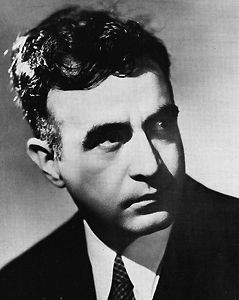

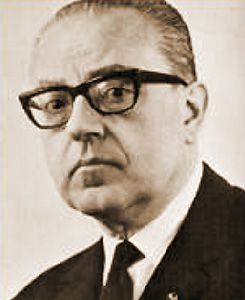
From left to right: Ch???vez, Villa-Lobos, Ginastera
Source: Dorian Recordings CD (my rip!)
Format: mp3, 320k/s (CBR), DDD Stereo
File Size: 120 MB
Download Link (re-up by Herr Salat) – https://mega.co.nz/#!9dMWyBiY!OABc5gW88t7HavPh2h0P_QwMEocFPA5uk3ou-5rxs1w
Enjoy! Don’t share! 🙂
Another trio of ballets, this time by three German and Austrian composers. Franz Schreker’s
The Birthday of the Infanta is typical of his freely tonal, opulent style, while Erwin Schulhoff’s
Moonstruck is a good example of the jazz-infused classical music of the 1920s. Finally, The Demon,
an expressionistic ballet by Paul Hindemith. All three composers were marginalized by the Nazis as
"degenerate" (entartet). Schulhoff died in a concentration camp in 1942. Enjoy!
Franz Schreker – Der Geburtstag der Infantin
Erwin Schulhoff – Die Monds???chtige
Paul Hindemith – Der D???mon
Music by Franz Schreker, Erwin Schulhoff & Paul Hindemith
Played by the Gewandhausorchester Leipzig
Conducted by Lothar Zagrosek
"The three ‘grotesque’ ballet scores on this latest disc in Decca’s ‘Entartete Musik’ series,
undoubtedly one of the most important and rewarding from a major label, fulfil most of the Nazis’ criteria
for ‘degenerate music’: two of them are by Jewish composers, one of those is jazz-based, and the third is
by that then unreformed avant-gardist, Hindemith. Of the three composers, Schreker, sacked from his academic
posts, died from the shock within months of the Nazis’ rise to power; Schulhoff, whose devotion to Communism
led him to take Soviet citizenship, died in a Bavarian concentration camp in 1942 and Hindemith escaped into exile.
All three works, though, were written during the heady years of the Weimar Republic or earlier. The Birthday of the
Infanta (a 1922 suite from a 1908 score) is based on the same Oscar Wilde story that was later to inspire Zemlinsky’s
finest opera. Schreker’s music here is luminous, often poignant, where Schulhoff, in Moonstruck (1925), is jazzy,
even raucous – a true child of the Twenties; Hindemith’s The Demon (1922), scored for chamber ensemble, is one of
his more colourful and engaging works. Zagrosek directs vivid accounts of all three works and the
Leipzig Gewandhaus Orchestra is captured in all its glory by the Decca engineers. Highly recommended."
Matthew Rye
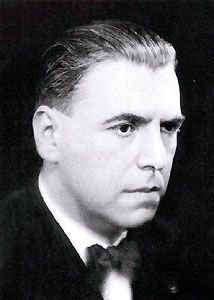
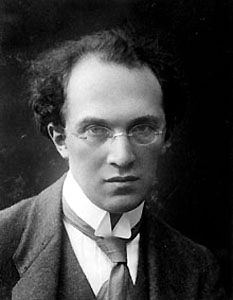
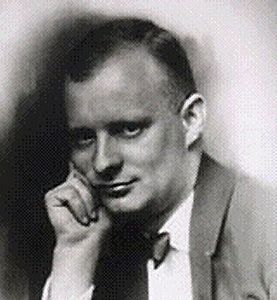
From left to right: Schulhoff, Schreker, Hindemith
Source: Decca CD (my rip!)
Format: mp3, 320k/s (CBR), DDD Stereo
File Size: 168 MB
Download Link (re-up by Herr Salat) – https://mega.co.nz/#!9AkVDKzS!erTSKyEqxByETNJOqDMfyWkjjeJn2pEMnGYukat HBQA
Enjoy! Don’t share! 🙂
———- Post added at 01:17 PM ———- Previous post was at 12:28 PM ———-
No.80
A quintet of works, all in some way inspired by water, by four different composers. Frank Bridge was a leading
English composer of the 1920 and 30s, and a teacher to Benjamin Britten. His orchestral suite The Sea was
his breakthrough, a post romantic multi-movement tone poem with some impressionistic touches. Speaking of
impressionism, there’s the greatest of all sea-related works of music again, Claude Debussy’s La Mer.
Anatoly Liadov was a part-time composer who specialized in evocative miniature tone poems, of which The Enchanted Lake
is a good example. Finally, the oldest piece on the menu, Felix Mendelssohn’s evergreen overture The Hebrides (Fingal’s Cave).
Music by Frank Bridge, Anatoly Liadov, Claude Debussy & Felix Mendelssohn
Played by the Long Beach Symphony Orchestra
Conducted by JoAnn Falletta
"So you are saying to yourself, repertoire a bit out of the ordinary for Albany Records? True, but still it is repertoire performed by a
magnificent American conductor and wonderful American orchestra. This disc was first issued privately by the Long Beach Symphony Association.
This is when it came to our attention. We were very impressed as were the reviewers who had the opportunity to hear the disc. So, here at
Albany Records, we are not just about American music, but American artists as well. In truth, no major label would ever give our great American
artists of this caliber a chance for exposure, so we decided to do it ourselves. In particular, the performance of the Bridge is terrific and can
hold its own with the best out there. The disc is well recorded. JoAnn Falletta is one of this country’s finest conductors. Listen to this
disc yourself and you can hear the talent."
Arkivmusic
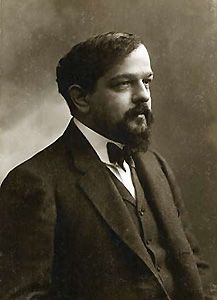
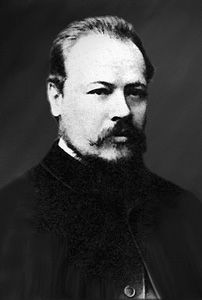
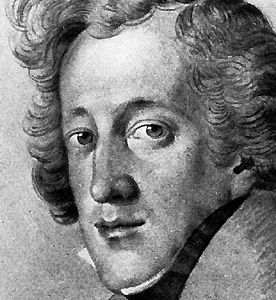

From left to right: Debussy, Liadov, Mendelssohn, Bridge
Source: Albany Records CD (my rip!)
Format: mp3, 320k/s (CBR), DDD Stereo
File Size: 156 MB
Download Link (re-upped by Herr Salat) – https://mega.co.nz/#!tMdDkYqB!CLPoHAAXhrTWqr-drVlbMHZ4UcASaWh74bdY6KsLJ2c
Enjoy! Don’t share! 🙂
The Sibelius Symphonies can be found here: Thread 122839
Italian composer Ildebrando Pizzetti (1880-1968) and his contemporaries Alfredo Casella and Gian Francesco Malipiero
all wrote music in what has come to be known as neo-classical, i.e. music that looks back to some of the forms
and modes of classcist and baroque music, but with a 20th century spin on them. Of these composers, Casella was
probably the most clean-cut "neo", while Malipiero also embraced impressionistic elements. Pizzetti was the most
opulently lyrical in his pieces, with late romantic elements mixed in with the neo-classical. Maybe that is the reason why
his works, deemed too diffuse and indecisive by some, have fallen by the wayside, with one notable exception: his
"church opera" Murder in the Cathedral (on the verse play by T.S.Eliot), which is still regularly performed.
Featured on these two albums are purely orchestral works. The Summer Concerto is a "concerto
for orchestra", cast in three movements. There are allusions to Beethoven, and Pizzetti himself called the work
his "pastoral symphony". The composer’s fascination with Greek lierature and history is evident in his
Three Symphonic Preludes for Sophocles’ Oedipus Rex and in The Feast of the Panathenaea, incidental
music to a performance of texts by Homer, Sophocles and others.
Songs of the High Season is a piano concerto originially written for the distinguished Italian pianist
Arturo Benedetti Michelangeli, but he never played the work. The rhapsodic treatment of the themes suggests
an external program or inspiration, like the Summer Concerto, it is open, outdoor music. There’s another prelude
to a play on Greek mythology, Phaedra, but this was a piece by D’Annunzio. The second album closes with
a suite from Cabiria*, a film score Pizzetti wrote in 1914, which was used as an overture to that silent epic.
Music Composed by Ildebrando Pizzetti
Played by the Thessaloniki State Symphony Orchestra
Conducted by Myron Michailidis
Music Composed by Ildebrando Pizzetti
Played by the Robert-Schumann-Philharmonie Chemnitz
With Susanna Caetani (piano), Boris Statsenko (baritone)
And the Chemnitz Opera Chorus*
Conducted by Oleg Caetani
"Ildebrando Pizzetti’s Concerto dell’estate of 1928 (really a three-movement symphony) is one of
the most attractive of all early 20th-century Italian orchestral works. It hasn’t been recorded since Gardelli
did it for Decca some 40 years ago, and this new version is most welcome. While Myron Michailidis chooses
virtually identical tempos in the outer movements, the central nocturne runs a bit slower (but not duller)
than the earlier version, at some gain in atmosphere. The recording balances, which place the woodwinds
and harps relatively forward, also suit the work very well. It’s a beautiful performance, well played and atmospheric.
I have a sentimental attachment to the Oedipus Rex Symphonic Preludes: this was the very first work that
I played as a percussionist with the Johns Hopkins Symphony Orchestra in my undergraduate days, and it
introduced me to Pizzetti. To be honest, the cymbal part didn’t give me much to do, but it did offer me the
opportunity to simply listen to a very beautiful piece that, like the Concerto dell’estate, deserves far greater
currency than it enjoys. It was recorded relatively recently by V???nsk??? for Hyperion, quite well too, but this
version is just as good, with confident horn playing and powerful climaxes.
The remaining two works receive their recording premieres. Pizzetti was basically a gentle, lyrical composer
but he could get his dander up quite effectively: witness the five-minute prelude to Clitennestra. Composed in the
1960s just before his death, you’d never know it from the harmonic style–it’s just as attractive and approachable
as the Oedipus Rex music of some 60 years earlier. La Feste delle Panatenee is another tryptich that, like the work
just mentioned, takes ancient Greece as its inspiration. Less somber than its predecessor, it concludes with
an imposing procession that could use a touch more heft from the brass and a less prominent snare drum–
but as with all of these performances conductor Michailidis and the Thessaloniki State Symphony certainly
do the music justice. Strongly recommended."
Classics Today
"The major work presented here is the piano concerto of 1930 Canti della stagione alta (Songs of the High Season).
Keith Anderson’s erudite – as usual – notes capture the sound world of this piece well. The music is immediately ‘open-air’,
modal in flavour and with a rhapsodic feel – the long singing lines of the strings show a composer of a naturally lyrical bent.
The way the woodwinds ornament and muse over their opening material is very beautiful. It doesn’t grab your attention
by the use of great arching melodies instead it creates its effects by use of texture and atmosphere – Pizzetti handles
the orchestra and soloist with great confidence. Certainly if you like your piano concertos big-boned, tonal and of a
romantic cut this is for you. Running at a shade under thirty minutes this is not a huge work but it feels bigger than
that. Not to imply that it outstays its welcome – far from it. As the first movement develops it moves away from the
pastoral to something altogether more dramatic with double octave passages in the piano tossed off with conspicuous
ease. There is a heraldic quality to some of Pizzetti’s brass writing that I really enjoy. Yes it could be argued there is a
cinematic element to it but it works for me! The slow second movement is altogether simpler although once again the
central climax is heavily brass led but I do like the way this immediately gives way to a quietly modal string passage
with some distant brass figures – sounding deliberately archaic – decorating the music. Not having seen a score it is
hard to know exactly how Pizzetti achieves the effect but the metre of the work is very flexible with a strong sense of
regular predictable bar-lines removed. Instead we can feel the underlying basic pulse – once again this seems to be a
stylistic nod towards the melodic fluidity of plainsong. The finale is played attacca leaping straight from the final notes
of the second movement. This is a true rondo which – again I agree with Keith Anderson here – has echoes of an
Italianate Rachmaninov although the quirky string led fugal passage and a final exciting brass peroration are uniquely
Pizzetti’s own. This proved to be a very pleasurable discovery indeed. The disc is completed by music Pizzetti wrote
for a silent movie in 1914 – Cabiria. What an extraordinary event this must have been – the bulk of the music for
this two and a half hour epic was assembled – as was so often the case with early silent film scores – from standard
orchestral repertoire. However for a key sequence – involving the sacrifice of 100 children to the God of Carthage Moloch! –
Pizzetti was commissioned to provide this ten minute sequence involving large orchestra, baritone soloist and chorus.
That it is pictorial is clear from the very first bars and again benefits from a performance of great flair. To be honest
it is the piece on this disc I would least often return but it is not trying to be anything but colourful and illustrative –
there is none of the subtlety or emotional weight that marks out the other pieces here. Conversely I cannot think of
another example of so early a dedicated film score of this originality and power. Well worth a listen in
that historical context alone."
Music Web
Source: Naxos CDs (my rips!)
Format: mp3, 320k/s (CBR), DDD Stereo
File Sizes: 162 MB / 114 MB (incl. covers & booklets)
Download Links (re-ups) – Piano Concerto, etc – https://mega.co.nz/#!mowH1LiC!JoJuKxXsTqCEr6-uE30bXDhPoeNdNX0t2PxTmiPkcNE
Concerto dell’Estate, etc – https://mega.co.nz/#!asADlTII!GEwukWPxY4OXSy1eZ5mvLlYnXzxpeDUZp-O2o1lbs3o
Enjoy! Don’t share! 🙂
Ernest Bloch was a Swiss-American composer and Jew – all of these elements influenced his body of work substantially.
Whereas the early works, composed while he was still living in Switzerland, show a French and German influence,
his later music (like the pieces on these albums) betray his Jewish heritage – he used both liturgical elements and traces
of Yiddish folk music. It is these later works that have earned Bloch an entry into the realm of important 20th century
composers. In a way his music sounds like a Jewish Mikl???s R???zsa. 😉
Of the works presented here, the Baal Shem and the Suite H???braique are probably the best-known, but the rest are
equally attractive (the Three Jewish Poems are featured on both albums, so you can compare the performances).
Music Composed by Ernest Bloch
Played by the New Zealand Symphony Orchestra
With Alexa Still (flute)
Conducted by James Sedares
Music Composed by Ernest Bloch
Played by the Deutsches Symphonie-Orchester Berlin
With Antje Weithaas (violin), Tabea Zimmermann (viola), Christiane Oelze (soprano)
Conducted by Steven Sloane
"Ernest Bloch lived somewhat of a nomadic life having lived in Switzerland and various locations in the United States.
His music was affected by these travels along the way. There is no question that Bloch is hardly discussed in classical
circles and is heard even less in the concert hall (if at all). Despite this, there are several great Bloch recordings
available on the market. Unfortunately, at the time of this review, this recording on Koch is no longer in-print.
Hopefully, it will be reissued soon. Best chances of finding this recording right now is in the used market.
There are three works on this Koch recording: "Three Jewish Poems," "Two Last Poems," and "Evocations." I consider
the main work, for me anyway, to be "Evocations." Soaring melodies, impressionistic harmonies, and furious middle
movement that will send chills down your spine. The last movement of "Evocations," in particular, is quite moving
with it’s quasi-Oriental melody. "Three Jewish Poems" is also a great work. "Two Last Poems" I found not to be
that memorable and lacking inspiration.
The performances from James Sedares and the New Zealand Symphony Orchestra are first-rate. There is another
recording of these works on BIS, but I consider this Koch recording to be superior in terms of performance,
but BIS has Koch beat in sonic clarity. I would pick-up the Koch recording first as the performances are quite
passionate and intense. The only plus side to the BIS recording (with Boreyko/Malmo Symphony Orch.) is
both "Evocations" and "Three Jewish Poems" is coupled with the lesser known "Symphony in B flat major."
What a great recording this is and it’s worth it to try and hunt it down. I also consider this a great starter
for those interested in hearing Bloch’s music. Highly recommended."
Amazon
"Here’s an attractive collection of Bloch’s shorter “Jewish” works, very well played and vividly recorded. Actually,
the Three Jewish Poems is quite substantial (it’s as long as, say, Debussy’s La Mer), and a major effort, but all
of these pieces are lovely. No complaints at all about the soloists: Christiane Oelze sings the two psalms most
affectingly, while both Zimmermann and Weithaas do Bloch proud. Conductor Steven Sloane deserves the
lion’s share of the credit, though, both for assembling the program as well as for securing an impressively
committed response from the ensemble. Very enjoyable indeed."
Classics Today
Source: Koch International & Capriccio CDs (my rips!)
Format: mp3, 320k/s (CBR), DDD Stereo
File Sizes: 123 MB / 140 MB
Download Links (re-ups) – Sedares – https://mega.co.nz/#!zlAAnQzD!BvdKCHGGOvJjKqB2fnzwrSbd06AgVU0DE-oU9VMPeR4
Sloane – https://mega.co.nz/#!yxQkUZhT!Z40UqCHraWg4UkCPF_Hqilz7fG9CFTDnMkN6WUz SIlg
Enjoy! Don’t share! 🙂
German Ernst Boehe was born the same year as Ildebrando Pizzetti, but this is where the similarities end.
A student of Ludwig Thuille and a professional conductor, Boehe wrote rather few but substantial orchestral works
in the late romantic style of Wagner and Strauss, which endeared him e.g. to Max von Schillings, the
composer discussed earlier in this thread. Boehe’s magnum opus is the massive quartet of tone poems
entitled From Odysseus’ Journeys, presented here in its entirety: Departure and Shipwreck, The Island of Circe,
The Lament of Nausicaa, and, on the second album, Odysseus’ Homecoming. Also included is another
large-scale tone poem, Taormina, a Tragic Overture and a Symphonic Prologue to a Tragedy.
Boehe was long-term chief conductor of the Pfalzorchester, which evolved into the Staatsphilharmonie Rheinland-Pfalz,
the same orchestra that made these recordings!
Music Composed by Ernst Boehe
Played by the Staatsphilharmonie Rheinland-Pfalz
Conducted by Werner Andreas Albert
"German composers seem duty-bound to write “Tragic Overtures” and “Tragic Symphonies”, and so far only Brahms and Mahler
(in their very different ways) have succeeded in living up to the term’s potential. Ernst Boehe (1880-1938) comes awfully close as
well, and I wouldn’t be surprised if posterity ultimately vindicates his effort. Written in an idiom somewhere between Brahms and
Strauss, Boehe for the most part sounds refreshingly free of the usual problems that beset conservative German, British, and
American music from the turn of the last century: a fear of exploiting orchestral color to its fullest, a pedantic approach to form,
and an emotionally inhibited expressive range. The overture opens with an impressively brooding funeral march, moves to a
sturdily symphonic allegro with a heroically questing second subject, and reaches an aptly pulverizing climax that leads to an
excellently timed coda. At 18 minutes, the piece may be a bit long for its material, but it certainly delivers the goods.
Boehe composed four tone poems inspired by The Odyssey, and three of them (a fourth will appear in a succeeding volume)
are included here: Departure and Shipwreck; The Island of Circe; and The Lament of Nausicaa. Scored for large orchestra,
the music brings to mind Sibelius’ Four Legends, though it dates from a decade later. Boehe’s style lacks the primal quality
that makes the Finnish master’s music so distinctive (though he shares with Sibelius a fondness for idiomatic and evocative
bass drum writing), but each of these three works reveals an abundance of characterful melodic and textural invention.
The advertised Shipwreck has the necessary violence without becoming obvious, and Circe’s charms, deliciously touched in
on the high strings and harp, never sound tacky as Boehe gets beyond the obligatory sweetness to hint at darker
undercurrents. In short, here’s a composer who really knows what he’s doing, and so for that matter do conductor
Werner Andreas Albert (typically secure and authoritative), the enthusiastic and willing Rheinland-Pfalz orchestra,
and CPO’s engineers. A find."
Classics Today http://i1084.photobucket.com/albums/j415/wimpel69/p9s9.gif
Source: CPO CDs (my rips!)
Format: mp3, 320k/s (CBR), DDD Stereo
File Sizes: 160 MB / 168 MB
Download Links (re-upped by Herr Salat)
CD 1 – https://mega.co.nz/#!AQ03warI!chePtnOzYoCFsceH0TqOPgTGsS5Igd6wv4WPGqH ZDc0
CD 2 – https://mega.co.nz/#!sBcGlZRJ!dYGXVTUzId1C_1bHF_vomVMzumRHIKeLAQTo_Xy n7b0
Enjoy! Don’t share! 🙂
———- Post added at 02:02 PM ———- Previous post was at 01:05 PM ———-
No.84
At a concert in Paris one evening in the 1930s, French composer Florent Schmitt could be seen running up and
down the aisles, and be heard screaming "Vive ‘itler" over and over. One may safely assume that this did little to
endear him to most of his countrymen, and might have hurt his posthumous reputation quite a bit. Which is a shame,
since he was clearly one of the finest French composers of his time. His most important work, La Trag???die de Salom???,
is featured on this album along with a fine, evocative tone poem for harps and strings, Le Palais Hant???, inspired
by Edgar Allan Poe. The Psalm XLVII* is also a major work of this neo classical composer, whose work is
experiencing a renaissance, and deservedly so.
Music Composed by Florent Schmitt
Played by the Sao Paulo Symphony Orchestra and Choir*
With Susan Bullock (soprano)*
Conducted by Yan-Pascal Tortelier
"Admired by Stravinksy and a close friend of Ravel, the French composer Florent Schmitt (1870-1958) wrote prodigiously
until well into old age, by which time his lush, sensuous compositions had fallen out of fashion. His La trag???die de Salom???
(1907), created for the American dancer Loie Fuller, remains one of his best-known works in part because its subject
matter attracted a whiff of scandal early in its history. It was adapted for Diaghilev’s Ballets Russes and danced,
reportedly naked, by Ida Rubinstein. Psaume 47, with Susan Bullock as a fine soloist, is luxuriousy delivered by the
S???o Paulo Symphony Orchestra and chorus, with conductor Yan Pascal Tortelier ensuring an authentically Gallic musical accent."
The Guardian
Source: Chandos CD (my rip!)
Format: mp3, 320k/s (CBR), DDD Stereo
File Size: 151 MB (incl. booklet)
Download Link (re-up) – https://mega.co.nz/#!JFRgTLLA!c8m-3Qh0O39dB1ifVYLWhGjDnjR6Z6oRFlZATXYIeVM
Enjoy! Don’t share! 🙂
That’ll be it for today! 😉
This version is very good, too, plus it is in modern sound, and contains Le Palais Hant???, which is another programatic work. These are the important factors in the context of this thread! 🙂
What the heck, it’s already uploaded, why not post it today: Albert Roussel was a leading French composer
of the gem??????igte Moderne (there’s really no comparably satisfying term for this in English. It’s like
"classic modernism", or "moderate modernism"). His Symphony No.3, which is not a programmatic work, is arguably his greatest,
with the ballet Bacchus and Ariane, recorded here in its entirety, running a close second. It is very
dynamic, atmospheric music, briliantly orchestrated. A suite from another ballet, Le Festin de l’Araign???e,
is also included. Of course, Georges Pr???tre knows his way around this particular repertoire, his performance
is at once nicely shaded and appropriately bouncy.
Music Composed by Albert Roussel
Played by the Orchestre National de France
Conducted by Georges Pr???tre
"I remember hearing this recording on its initial release and being extremely unimpressed with its sound on LP: cavernous,
diffuse, and harsh all at once. On CD, however, things have improved noticeably. The sound stage is still too deep for my
taste, but balances have been corrected and there actually is something of a low end, though a bit more heavy percussion
presence would have been nice. Georges Pr???tre’s performances have plenty of energy and bite. The concluding Bacchanale
of Bacchus et Ariane works up an excellent head of steam, and the Orchestre National brass players, horns especially,
blast away with impressive abandon. Pr???tre also weaves the gossamer threads of the Spider’s Feast suite (or “symphonic fragments”
as the composer calls them) into a satisfying whole. As a performance, this beats Dutoit in Bacchus (Erato), but doesn’t quite
equal Tortelier (Chandos), who has better sound and also offers the complete Spider’s Feast. Still, there’s little to disappoint
here, and if you don’t want, don’t have, or can’t get Tortelier, or simply want to hear a different view of the music, this disc
will provide considerable pleasure."
Classics Today
Source: EMI France CD (my rip!)
Format: mp3, 320k/s (CBR), DDD Stereo
File Size: 123 MB
Download Link (re-up) – https://mega.co.nz/#!gIBn2YzK!OdZbVxGlgH_mQ1HnggFAFTwEJjN0_7cQuQ04ksS P6hw
Enjoy! Don’t share!
———- Post added at 06:03 PM ———- Previous post was at 05:57 PM ———-
After years of basking in Martinon’s version which is filled with such energy and passion- as far as the Psalm is concerned- I just can’t find another version that comes close (even if digitally recorded). I explored Schmitt afterwards and dimly remember the Poe Haunted Palace. Sadly it didn’t turn my crank. This seems to happen frequently. You connect with one or two masterful works by a composer and all the rest never click. Much like Arnold Bax: I love all his symphonic work that is anchored by the piano- Symphonic Variations, Winter Legends- as well as his solo works (especial his sonata No. 3). But I tried for ages to sink into those impossible symphonies and finally gave up and sold them off.
Bax is extremely uneven, he simply wrote too much music and didn’t stop writing after his inspiration had long dried up (same as Hindemith e.g.). His Symphonies 1,2 and 6 (6 in particular) and Winter Legends are powerful works, as are Tintagel, November Woods and some other tone poems (I posted those earlier). The Symphonic Variations I find a bit clumsy, and overlong. But he was an original voice: not quite Strauss, not quite Debussy, not quite Rachmaninov.
Granted much of his piano work was inspired by his rogering Harriette Cohen, who wasn’t such a great pianist- but without that love affair we wouldn’t have so much beauty in the world. Indeed he was an original voice. Even my most favorite composers didn’t always know ’em out of the ball park. But I am glad they kept working up until the end. Once told my old art professor how I admired Ralph Vaughan Williams who did just that. Then mentioned that RVW had a second, much younger than himself, wife. My professor said, "Ha! That’s what killed him."
No.86
An interesting collection of four Chinese recorder concertos, three with extra-musical programmes, and
played by the great Michala Petri. The best-known of the four composers are of course Bright Sheng
and Chen Yi, both of whom have been enjoying great careers in American and international music.
Music by Tang Jian-Ping, Bright Sheng, Ma Shui-Long & Chen Yi
Played by the Copenhagen Philharmonic Orchestra
With Michala Petri (recorder)
Conducted by Lan Shui
"The contents of this album are less unusual than the proclaimed Chinese recorder concertos concept.
Only one of the four works, Chen Yi’s The Ancient Chinese Beauty, is originally written for recorders; the
others are arranged from music for Chinese flutes (or, in the case of Bright Sheng’s Flute Moon, Western
piccolo). Sheng and Chen Yi are partly Western-trained, and their pieces arose in an American context.
This said, veteran recorder virtuosa Michala Petri, recording in her home country of Denmark with the
Copenhagen Philharmonic under Chinese-Singaporean conductor Lan Shui, delivers a bravura performance here.
Chen Yi writes difficult registral jumps for Petri, but elsewhere, as in the low oscillations of the finale of Tang
Jianping’s Fei Ge (Flying Song), one gets the feeling that Petri has pushed the recorder into new tonguings as
she imitates the Chinese dizi bamboo flute. The presence of the Tang Jianping work points to another of the
album’s strengths: its diverse program. There is a work in the Chinese style familiar to listeners of the
Mao Zedong era; Bang di concerto composer Ma Shui-Long is Taiwanese, but as the excellent booklet
notes (in English and Chinese, but not Danish) indicate, the official Taiwanese style of that time, intended
to provide a counterweight to the Yellow River Concerto being promoted by the mainland government,
ended up being similar to it in many ways, because official styles are official styles. This concerto, originally
written for the bang di small membrane flute, marked the beginnings of his move away from this style.
The biggest find is the Tang Jianping piece, an eventful, kaleidoscopic piece drawing on a variety of Chinese
folk traditions and expertly handling the Western orchestra (it was originally composed for a Chinese ensemble
but arranged by the composer). The program is truly a "Chinese fugue in four voices," as the booklet proclaims,
and mention should be made of the unusually elaborate and nicely edited booklet, complete with Chinese seals.
A strong outing from Denmark’s new OUR Recordings label, and it is to be hoped that the label will enter the
field of cross-cultural repertory that has so far been left mostly to the Netherlands label Channel Classics."
All Music
Source: OUR CD (my rip!)
Format: mp3, 320k/s (CBR), DDD Stereo
File Size: 164 MB
Download link (re-upped by Herr Salat: https://mega.co.nz/#!RclmnRyB!SP6GXk6KMwXCQzb0HDy95woQO9sfwZjEtDMzlkN EyU0
Enjoy! Don’t share! 🙂
———- Post added at 10:59 AM ———- Previous post was at 10:10 AM ———-
No.87
A most delightful collection of miscellaneous works by Alan Rawsthorne, another tonal
middle-of-the-20th-century English composer. Rawsthorne also wrote a number of film scores,
and there is a Chandos collection of some of them in the British Film Music series.
Featured is one of Rawsthorne’s most popular works, the "entertainment" Practical Cats
for narrator and orchestra, the Theme, Variations and Finale, the bustling Street Corner Overture,
the Medieval Diptych for baritone and orchestra, the Coronation Overture (no bets accepted
for guessing whose coronation), and a very brief suite from the ballet Madame Chrysanth???me.
Dutton drafted the same conductor that Naxos used for their Rawsthorne discs, David Lloyd-Jones,
and the Royal Liverpool Philharmonic. The narrator in Practical Cats is Simon Callow, a well-known
English actor best remembered outside the UK for his role as the bombastic older part of a gay
couple (with John Hannah) who dies of a heart attack in Four Weddings and a Funeral.
Music Composed by Alan Rawsthorne
Played by the Royal Liverpool Philharmonic Orchestra
With Simon Callow (narrator), Jeremy Huw Williams (baritone)
Conducted by David Lloyd-Jones
"The Rawsthorne Trust vies with the Finzi Trust in how much has been achieved for their respective composers
in such a short time. Film royalties have continued to provide the funding for studio session after session.
The mature Rawsthorne works have been recorded since the late 1990s principally by Naxos and latterly by Dutton.
The linkage between the two is conductor David Lloyd-Jones who featured heavily and sympathetically on the
Naxos recordings. He now conducts this assemblage of the rare and the familiar.
Two overtures of pretty much equal length bookend this collection which also fills several gaps in the
Rawsthorne discography.
The Street Corner Overture goes with a real swing goaded on to grand effect by Lloyd-Jones. There is no
escaping the picaresque raucous bombast of some of this music. It smacks of a collision between Cockaigne
and Beckus the Dandipratt. The rare Coronation Overture has a Handelian weightiness in its veins relieved by
an eerie distant cavalcade at 1:10. It’s a strange piece with some splendid moments amid the Handelian references.
Also intriguing are the edgy fanfaring passages at 3:20 and the capricious soloistic writing at 3:55 onwards.
What we hear is John McCabe’s reconstruction from the orchestral parts. The original MS full score was lost.
The complete ballet of Madame Chrysanth???me has been recorded by ASV. The subject is taken from the novel
by Pierre Loti (not Lotti, Dutton). The four movements here are a sensationally lyrical Procession with Lanterns
which is more RVW than Rawsthorne, a Bernstein-like Sword Dance which is impressive and strongly rhythmic,
the Hornpipe is echt-Rawsthorne in its surging lyrical line and the Les Mousmes links back to the mood
of the first movement. This is a most attractive character suite.
Practical Cats is well known from the classic Robert Donat recording on EMI. The orchestral overture has all the
street urchin impudence and Offenbach and Auric flutter that we expect. You can hear it again in Jellicle Cats (tr.12).
Simon Callow is suitably stately, ingenuous and artfully artless in his delivery. This is a Practical Cats for the new century.
The booklet does not reprint the words but their is no need: Simon Callow is clear as a bell yet unaffected and full of character.
The Theme, Variations and Finale dates from 1967 but presumably because it was written for Graham Treacher and
Essex Youth Orchestra it is softer in language than we might expect from late Rawsthorne. There is an angularity to
this writing but it’s gentle and the turmoil is comparable with that of Cort???ges and Street Corner. The triptych is
presented here as a single track.
The Medieval Diptych is a little known work and this is its world premiere recording as was the triptychal work for
Graham Treacher. The language is fully accessible and there is little sign of the dissonance associated with Rawsthorne
scores of the 1960s – for example the Third Symphony. He wrote little for the human voice with orchestra although
there is the central movement of his Second Symphony ‘Pastoral’. The two poems have the Virgin Mary as their focus.
The pattern of two poems of interlinked subject matter was established by Finzi in his A Farewell to Arms and his
Two Milton Sonnets. These two are powerful if rather bleak and volatile settings. If the music of the first part is
predominantly haunted with a sense of horror lurking over the shoulder Adam Lay yBounden is more playful but it
feels more like the Grand Guignol of Lambert’s King Pest. The mood becomes more frankly celebratory as the piece ends.
Anyone concerned with British music for voice needs to hear this.
The words for Medieval Diptych are provided on the Dutton website. The notes are by John Belcher who on occasion
seems with John McCabe to have instigated, piloted and provided momentum and sustenance for the
Rawsthorne revival of fortunes.
A well presented collection in excellent performances and recordings filling gaps in the Rawsthorne
discography with panache."
Music Web
Source: Dutton Epoch CD (my rip!)
Format: mp3, 320k/s (CBR), DDD Stereo
File Size: 188 MB (incl. cover, booklet)
Download Link (re-up) – https://mega.co.nz/#!gMxglbLb!XIVo2V9TXcOphW6T8TymTxZnsR5pIufNpsc36Ph BGhk
Enjoy! Don’t share! 🙂
———- Post added at 11:24 AM ———- Previous post was at 10:59 AM ———-
No.88
Jes???s Guridi was born in Vitoria in 1886, and began his musical training in Bilbao. He left Spain to continue his
studies in Paris, Li???ge and Cologne, and on his return was appointed director of the Bilbao Choral Society for
whom he wrote a number of works, most notably the collections of Basque folk-songs and one of his
masterpieces, As??? cantan los chicos, for chorus and orchestra.
The Pyrenean Symphony was composed in 1945 and given its premiere the following year by the Bilbao
Symphony Orchestra and Jes???s Ar???mbarri. This musical evocation of the soul of the mountains, and the danger
they represent, at times touches on the narrative style of a tone poem. Each of the symphony’s three movements
is composed in a variation on sonata form. The work’s soundworld is characterised by a particular modality present in
many Basque folk songs: altered thirds and sevenths in a major key. The orchestral and instrumental textures
are carefully chosen for their expressive qualities. Guridi’s opera, Amaya, was the Basque equivalent of the
attempts made in most other European countries to create a “national opera”. It is a musical reflection of increasingly
nationalistic feelings in that it tells a story based on the history, mythology and literature of the Basque Country.
The Espatadantza or Sword Dance, (Act II, Scene IV), is the most spectacular scene of the entire work.
This is a striking, warlike dance which is always performed on great occasions involving the Basque people.
Keith Anderson
Music Composed by Jes???s Guridi
Played by the Bilbao Symphony Orchestra
Conducted by Juan Jos??? Mena
"With their special series, such as American Classics, Spanish Classics and 21st Century Classics, Naxos have
made available at budget price a lot of worthwhile, little-known, often neglected or simply forgotten music. I have
discovered much fine stuff in the Spanish Classics series, of which the present release is a recent instalment. It is
actually the second Guridi disc in this series, the first one (8.557110) including the delightful Ten Basque Melodies
and the beautiful As??? cantan los chicos for treble voices and orchestra. The second volume consists mainly of one
major work Sinfon???a pirenaica (“Pyrenean Symphony”) completed in 1945. The fill-up has been taken from the complete
recording of Guridi’s lyric drama Amaya released a few years ago (Marco Polo 8.225084/5), that I have not heard so far.
Sinfon???a pirenaica is a substantial and fairly ambitious work in three large-scale movements. As implied by the title,
the piece evokes the Pyrenean mountains, “the soul of the mountains and the dangers they represent”; but, let me
tell you straightaway, this is no Basque Alpine Symphony. Neither may it be likened to d’Indy’s Symphonie C???venole,
although Guridi’s traditional, colourful music often has a ring of folk music, without quoting any Basque folk tune
(or so I guess). The first movement is the longest, the weightiest and the most developed of the three, which does
not mean that the other movements are lightweight or uninteresting; quite the contrary. The second movement, a
rather long Scherzo, alternates dance-like, folk-inflected episodes and more lyrical ones sometimes redolent of plainchant
(a small chapel or an oratory lost in the mountains?). The third movement, of heroic character, builds up to a noble
and triumphant apotheosis. Am I alone in hearing faint echoes of Vaughan Williams’ Fifth Symphony or Coastal Command
here? The music’s evocative strength, as well as Guridi’s orchestral mastery, is quite clear throughout this often
imposing piece. As already hinted at, Guridi’s idiom is fairly traditional, often folk-inflected, occasionally spiced by some
mild dissonance and – more than once – colourfully impressionistic. This is essentially fairly impressive outdoor music.
It evokes massive mountainous vistas and rugged landscapes, the play of light and shadow but with darker undertones.
The music also powerfully conveys a strong feeling of elation. In this respect, Guridi’s symphony might well compare,
albeit superficially, with Delius’ Song of the High Hills. In short, a serious, heartfelt and superbly crafted work
that clearly deserves to be heard.
As mentioned earlier, the disc is rounded-off with a short excerpt from Guridi’s lyric drama Amaya of 1920, probably
the closest any Basque composer has ever come to writing a national opera. The short Sword Dance appropriately
evokes Basque folk music with fife and drum, and has the chorus joining in the final acclamation.
Very fine performances, as far as I can judge, that serve the music well … and very good recorded sound. Superbly
crafted music not lacking in grandeur, though definitely no earthshaking masterpiece. Nevertheless well worth hearing.
Yes, I enjoyed this release enormously."
Hubert Culot, Musicweb International
Source: Naxos CD (my rip!)
Format: mp3, 320k/s (CBR), DDD Stereo
File Size: 124 MB (incl. cover, booklet)
Download Link (re-up) – https://mega.co.nz/#!tM5HVIbS!fiW7nCje49qF9KW4yb_W0nUkO3QEIXGS7PIEbd3 85Q8
Enjoy! Don’t share! 🙂
Sergei Prokofiev wrote a lot ballet music, the most famous examples of which are certainly Romeo and Juliet,
and Cinderella. But there are also some shorter, often edgier examples, like the two items on this album:
Le Pas d’Acier (The Steel Dance/Step) is the more remarkable of the two, a riveting, dynamic example of
a style briefly popular in the 1920 called futurism, or "machine music" if you will. In these works, the composers
were trying to capture modern life and work in the machine age, often with a social message. Le Pas d’acier
was written for and staged by Diaghilev’s famous Ballet Russe.
The other ballet is even lesser known: On the Dnieper, composed for the Paris Grand Opera in 1930, is
rather more lyrical: It concerns the return of a Red Army soldier to his native village, and the problems
to adjust to his former life and love.
Music Composed by Sergei Prokofiev
Played by the USSR Ministry of Culture Symphony Orchestra
Conducted by Gennady Rozhdestvensky
"Prokofiev’s music for ballet spans his career from 1915 to his death in 1953. The early ballets, written at
Diaghilev’s request, were first performed in the heady post-war France. Diaghilev’s Ballets Russes was in the
forefront of artistic innovation, and every new production was expected to be even more astonishing
than the one before.
Prokofiev and Diaghilev met for the first time in London in 1914 and, as it was the shrewd and ultimately
sagacious impresario’s practice to encourage young talent, he presented the composer with his first ballet
commission. Diaghilev put Prokofiev in touch with the poet Sergei Gorodetsky, telling him to create a
ballet on a Russian fairy tale or prehistoric theme. Prokofiev selected for his subject the prehistoric nomads
who roamed the Ukrainian steppes, the Scythians. The ballet was rejected by Diaghilev before its completion
because it sought to emulate Stravinsky’s The Rite of Spring, and Diaghilev was looking for something to
"outrage" the public with something new. However, the ballet music, whose orchestral effects and subject
have some similarities to Stravinsky’s Rite of Spring, was revamped into an orchestral suite. (It was to
become Prokofiev’s practice to derive orchestral suites and symphonies from music originally intended
for the theater.) Newly entitled Scythian Suite: Ala and Lolli, Op. 20, it was introduced by the composer
at the Maryinsky Theater in St. Petersburg, January 29, 1916.
Diaghilev continued his connection with Prokofiev by arranging a piano recital in Rome in 1915. Despite
the termination of his first assignment, he gave Prokofiev a second commission which resulted in the score
for Chout (sometimes known as The Buffoon) to be choreographed by Massine. The piano score was completed
in 1915, but in the meantime Massine left the Ballets Russes. Mikhail Larionov and Tadeo Slavinsky were
subsequently chosen to collaborate on the choreography. The production was eventually mounted in May 1921.
When Diaghilev brought a group of patrons to a final dress rehearsal of the ballet in London, Prokofiev was
conducting. He considered it a working rehearsal and, wishing to be more comfortable, removed his jacket.
Several elderly ladies from London high society, scandalized, rose to their feet and departed with their
escorts. It was a signal for all the other invited guests to depart.
In 1925 Diaghilev asked Prokofiev to write a ballet on a "Soviet subject" that would reflect the contemporary life
in Soviet Russia. Prokofiev met with Sergei Yakulov, a Soviet theatrical constructivist artist who was hired as set
designer for the new ballet. They agreed the ballet should be a portrayal of the industrial progress of the USSR.
Prokofiev gave the music the title Urignol – derived from U.R.S.S. and parodying Stravinsky’s Rossignol –
but Diaghilev disliked the name. In the end the ballet was called Le Pas d’Acier. Despite trying, Diaghilev was
unsuccessful in his quest to secure the services of a young Soviet choreographer. He eventually turned to
Massine. Parisians eagerly anticipated a Bolshevik propaganda ballet. Although it was well received, the ballet
was reviewed as "a weird work beginning with its title and ending with its music and choreography".
For Diaghilev’s last Paris season of the Ballets Russes, Prokofiev composed the music for Prodigal Son with
choreography by the young Balanchine. Opening May 21, 1929, it was a big success in Paris and later Berlin
and London.
During the summer of 1931 Prokofiev was commissioned to write the music for a ballet by Serge Lifar entitled
Sur le Borysh???ne (On the Dnieper). Prokofiev dedicated the work to Diaghilev who had died in Venice in 1929.
Despite being a collaboration of experienced and established artists, the ballet was not a success."
Source: Melodiya CD (my rip!)
Format: mp3, 320k/s (CBR), ADD Stereo
File Size: 175 MB (incl. cover & booklet)
Download Link (re-up) – https://mega.co.nz/#!tJhTzS5A!DlwojlIPmn_99K2G9UuWswErS29QFfpT_y-li5n2ZhQ
Enjoy! Don’t share! 🙂
Non-film music doesn’t get much more film music-like than in Isaac Schwartz’s heartfelt, proudly ecletic symphonic tribute
to the fate of Eastern European Jews under the Nazi terror, entitled Yellow Stars. The connection is all the more pertinent since
Schwartz’s music was, if you will, "set to film" by director Joan Grossman. If you like some of Shostakovich’s more lyrical
film music, or The Snowstorm by Gyorgy Svidirov, you’ll like this, too. The language is uncomplicated, tuneful and, like much
Yiddish-inspired music, truly wears its heart on its sleeves. 🙂 – The subtitle is "Purim play in the ghetto", alludes to the
Jewish tradition of staging informal plays wherever possible, and, in the context of the ghetto, the indomitable spirit of the
Jewish people in the face of the horrors of the Nazi holocaust.
Music Composed by Isaac Schwartz
Played by the National Philharmonic Orchestra of Russia
Conducted by Vladimir Spivakov
"Joan Grossman’s film illustrates Yellow Stars with film footage from a variety of sources and locations,
travelling in a rough chronological arc from book burning and shop-boycotting (well known images)
to the liquidation of the Warsaw and Kovno ghettos. There are also scenes from Dombrova in Poland,
the occupation of Lithuania, still shots and, most innovatively, contemporary colour footage, taken
from a car, of the countryside between Treblinka and Warsaw. It’s used to illustrate the Nocturne movement.
Among the much unusual footage one can see film of a choral concert and straight-to-camera
shots of crowds in the ghettos. In the third movement, Merry Dance, we see stills of musicians
and others, many of them children. Street crowds throng throughout Evening Prayer, the sixth
movement including significantly the ill and beggars. In the finale we see the transports and the
liquidation of the ghettos, especially that of Kovno in 1944 and Warsaw. The film then attempts
to present images of the Holocaust experience as a visual analogue to Schwartz’s music.
Schwartz was born in 1923 and suffered the brutal realities of life in the Soviet Union. His father was
arrested and died in one of Stalin’s camps and the family was sent to Kyrgystan. There he met
Shostakovich’s sister Maria Dmitrievna, similarly banished, and it was she who arranged accommodation
in Leningrad when the family was allowed to return to Russia after the War. It was her brother who
recommended he study with Boris Arapov – and secretly financed those studies. Schwartz refused to
denounce Shostakovich in 1948, despite provocation, and managed to produce a stream of works
following his graduation in 1951. He later moved towards film music, writing a raft of scores for a
succession of films, many of them very well known, and only returned to symphonic music in his seventies.
Yellow Stars or Purim spiel in the ghetto was one of the fruits of that return, subtitled a concerto for
orchestra in seven parts. It received its first performance in 1998. The work owes its genesis to Schwartz
reading an account of life during the War in the Kovno ghetto in Lithuania. The Purim festival, a time
of joyfulness, was a particular focus – it became "a festival of nooses" in the camp. Schwartz’s work
is dedicated jointly to Raoul Wallenberg and to Vladimir Spivakov, who didn’t conduct the premiere
but who conducts this recording.
It’s hard to be other than descriptive when considering a work such as this. Opening with a morning
prayer we find gravity and serenity fused – a stetl dance, clarinet klezmer, strong shofar horns as the
music sweeps up and then – once more – relaxation into reflective intimacy led by a theme for solo cello.
Again the juxtapositions ramify with the return of the dance, augmented by solos for violin and trumpet;
the whole forming a kaleidoscopic world, Mahlerian and with elements of Shostakovich as well.
The second movement is a Chorale with variations, once more lit by clarinet dance and by an outsize
violin solo. There are the merest hints of Sibelius in the writing that cleaves strongly to an early twentieth
century tonal muse throughout. In the central Dance – a kind of Scherzo – there’s a riot of colour with
bassoon, bass clarinet and other winds festively celebrating with unbridled freedom. This is followed by
the reflective, refractive Nocturne – lyrical, maybe filmic, Mahlerian, sometimes ambiguous. The fifth
movement is almost parodically Jewish – thick portamenti, whilst the sixth embraces desolate trumpet
calls, a hint of Rachmaninov’s Second Symphony – abruptly cut short. The Finale opens with a forlorn
clarinet, increasing melancholy, until tense brass drives the writing onwards. Slow, sombre, though s
eemingly ultimately uplifting, the return of klezmer tune presages a fast dance and the music gets
quicker and quicker. Defiance? A Shostakovich Eighth Quartet Dance of Death? Maybe both.
The performances are highly accomplished and present Schwartz’s music with warmth, rhythmic
tautness and bite. They don’t underplay the occasional moments of Rimsky-like lyricism nor the
Mahlerian marches. Much is moving, compelling and often filmic in its intense immediacy."
Music Web
Source: Capriccio CD (my rip!)
Format: mp3, 320k/s (CBR), DDD Stereo
File Size: 122 MB
Download Link (re-up) – https://mega.co.nz/#!QUYjlDxZ!WbNMXTEXI8bK6R6uwWTCSBIKHnhwv-_UgjyU08LtkeM
Enjoy! Don’t share! 🙂
No.91
Douglas Lilburn was born in New Zealand, but educated in London, a student of Ralph Vaughan Williams’,
the leading English composer of the 1930s. At that time, the works of Jean Sibelius were still quite the rage in
England, and the aspiring composer modeled many of his earlier works on the style of the Finn. Shortly before his return
to New Zealand in 1940, Lilburn wrote a work that is still his most popular, the Aotearoa Overture. Aotearoa
is Maori and means "The Land of the White Clouds", which is the natives’s term for New Zealand. The short
programmatic overture has become a signature work for the country and was featured as the opener in the
New Zealand Symphony’s European tour a couple of years back.
Like in the earlier The Forest and the later A Song of Islands, the style mixes elements of British 1920/30ish music
with the broad outlines of the Sibelius tone poems. Only in later years did Lilburn adopt a more experimental style,
and did in fact dabble in electronic music a lot.
Music Composed by Douglas Lilburn
Played by the New Zealand Symphony Orchestra
Conducted by James Judd
"Douglas Lilburn wrote relatively little orchestral music. Aside from the three symphonies (also on Naxos, very well played
by this same orchestra) this disc about does it. Much of the music dates from early in his career and accordingly shows a
variety of influences: Vaughan Williams (Lilburn’s teacher), Copland in A Birthday Offering (1956), and above all Sibelius,
particularly in Forest (1936) and A Song of the Islands (1946). These were all good models, but at the same time Lilburn
had an individual voice, even if its elements are difficult to pin down because of the pace at which he developed from a
home-grown, New Zealand branch of the English pastoral school to the much spikier idiom of the Third Symphony and
(on the way there) A Birthday Offering.
Indeed, by the early 1960s Lilburn gave up working in traditional media and concentrated his attention on experiments in
electro-acoustic music, which means that he effectively dropped off the map. Listening to the attractive works on this disc,
from the Aotearoa Overture (his most famous piece) to the lovely tone poems, you can’t help but regret his decision,
however personally motivated and necessary it may have been for him. In any case we still have this rousing, very well
executed, finely recorded disc to enjoy, in which Lilburn’s home-town team under the baton of the ever-reliable
James Judd does him proud. An easy recommendation."
Classics Today http://i1084.photobucket.com/albums/j415/wimpel69/p9s9.gif
Source: Naxos CD (my rip!)
Format: mp3, 320k/s (CBR), DDD Stereo
File Size: 175 MB (incl. cover & booklet)
Download Link (re-up) – https://mega.co.nz/#!EJ4XSLJC!bTxdz1CkdmYSU4ShfHy-alvEKMl5X4DBJIYzJxHQkh4
Enjoy! Don’t share! 🙂
No.92
Nights in the Gardens of Spain is among Manuel de Falla’s most impressionistic and poetic works, full of
shimmering textures that recall Debussy, but with a hard-edged precision brought to the forefront by the piano.
Also featured is Falla’s ost famous ballet, the extremely colorful, folkloristic The Three-Cornered Hat.
Music Composed by Manuel de Falla
Played by the Academy of St. Martin the Fields
With Tzimon Barto (piano), Ann Murray (soprano)
Conducted by Sir Neville Marriner
"Since his appearances as pianist at the Vienna Musikverein and the Salzburg Festival at the invitation of
Herbert von Karajan, Tzimon Barto has repeatedly brought dynamic and highly acclaimed performances to audiences
worldwide. He is internationally recognized as one of the most important American pianists of his generation, performing
to packed halls of faithful fans with solo, orchestra and chamber music concerts. Barto’s career spans over two decades
featuring performances with nearly every major orchestra worldwide. Barto is a frequent guest in Europe, with recent
appearances in Austria, Italy, Czech Republic and Germany.
Ondine records Finland, released a Rameau solo album: "A BASKET OF WILD STRAWBERRIES, ‘in 2006, ‘A Selection of
Keyboard Jewels’ by Jean-Philippe Rameau which has received outstanding reviews." A Ravel solo album, Miroirs/Jeux
d’eau followed, also recognized for Barto’s unique take on the music. Tzimon Barto’s numerous recording for EMI include
concerti by Ravel, Prokoviev, Rachmaninov, Liszt, Chopin and Bart???k. He has also recorded Gershwin’s "Rhapsody in Blue",
Manuel de Falla’s "Nights in the Gardens of Spain", and solo recitals of works by Chopin, Schumann and Liszt, as well as
a disc of popular encores, featuring music ranging from Bach to Joplin. One of this Season’s highlight is the release of
his Ravel recording for the Ondine Label.
Barto was born and raised in Eustis, Florida. He began his piano studies with his grandmother at the age of 5. As a teenager
he studied at Rollins College in Winter Park, Florida, and the Brevard Music Center. He attended the Juilliard School of Music
from 1981-1985 studying piano with Adele Marcus. While at Juilliard he won the Gina Bachauer Competition on two
consecutive years as well as the school’s concerto competition. Additionally, Barto was a conducting fellow and a coach
for the American Opera Center. "
Source: EMI CD (my rip!)
Format: mp3, 320k/s (CBR), DDD Stereo
File Size: 148 MB
Download Link (re-up by Herr Salat) – https://mega.co.nz/#!wUEUnDbS!f0hP2CY1tm7JsxnhxH7NGh8jiuRAkIdtp-wT4sO0_8M
Enjoy! Don’t share! 🙂
For a composer who wrote about 300 works (including some film music), Antonio G???mezanda is surprisingly obscure
to the general public even in his native Mexico (I couldn’t find an online review of this album in English either!). Born in
Lagos de Moreno (hence the title of the symphonic poem which opens this collection), he studied in Mexico City
with Manuel Ponce, a leading Mexican composer of his time. G???mezanda travelled a lot, presenting his music in
France, Czechoslovakia and Germany. The rhythmically alert Six Mexican Dances and Mexican Phantasia
are highlights, as is the concluding suite from the ballet Xiuthtzquilo (The Aztec Feast of Fire).
Music Composed by Antonio G???mezanda
Played by the Berliner Sinfonie-Orchester
With Alan Marks (piano), Wolfgang Boettcher (cello)
Conducted by Jorge Velazco
Source: Koch Schwann CD (my rip!)
Format: mp3, 320k/s (CBR), DDD Stereo
File Size: 153 MB
Download Link (re-up) – https://mega.co.nz/#!boACHbjT!Vg9-1HA-oWU9F3v1xPDoh0ZUS7FeSRdgTL6YquVG4Fs
Enjoy! Don’t share! 🙂
He won an Emmy for the Holocaust TV series in 1979: Morton Gould, one of the most prolific and successful
American composers in the "Coplandia" style, occasionally dabbled in film and TV music throughout his career (Windjammer),
but his concert works are the main focus. Of those, one of the strongest is a ballet he wrote for Agnes DeMille, the noted
dancer and choreographer: Fall River Legend, based on the infamous Lizzie Borden murder case in the 19th century.
The ballet is presented here in its complete version, plus a 20 minute "talk" between Gould and DeMille about how it came into being.
Music Composed by Morton Gould
Played by the National Philharmonic Orchestra
With Brock Peters (speaker)
Conducted by Milton Rosenstock
"First performed by American Ballet Theater on April 22 1948, Fall River Legend is the story of Lizzie Borden, the
Massachusetts spinster who was tried for the ax-murder of her father and stepmother. Although Lizzie was
actually acquitted, in the ballet she is convicted and hanged. De Mille creates a portrait of a shy, sensitive but
receptive girl, turned into a murderess by her father’s psychological abandonment in favor of his second wife,
a sour, jealous, manipulative woman who frustrates Lizzie’s budding romance with her minister. Gothic in tone
and deeply perceptive in its depiction of the consequences of love thwarted, Fall River Legend reveals a truth
deeper than reality."
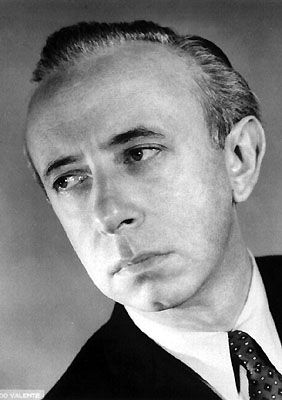

Left: Morton Gould – Right: a new production of "Fall River Legend" from 2007
Source: Albany Records CD (my rip!)
Format: mp3, 320k/s (CBR), ADD/DDD Stereo
File Size: 155 MB
Download Link (re-up by Herr Salat) – https://mega.co.nz/#!RJVjDIRb!ArAiFTKCU4nGsfVqfDueFj810fBfjsdEv7gJO05 lAj4
Enjoy! Don’t share! 🙂
Two classical composers are known to have been killed by invading/occupying foreign forces in their own front yard: One is
Anton Webern, shot by a US soldier in 1945 when he lit a cigar in his garden, the other is French Alb???ric Magnard, who
took a shot at German troops in 1914 who were trying to raid his property, and was killed in the return gunfire. Magnard belonged to
the generation of Claude Debussy, but was still much influenced, like almost all of his fellow French composers, by the
(over)ripe late romanticism of Richard Wagner. Included in this collection are the beautiful Hymne ??? Venus,
the Chant fun???bre, the Hymne ??? la Justice and the Suite in the Olden Style.
Music Composed by Alb???ric Magnard
Played by the Orchestre Philharmonique du Luxembourg
Conducted by Mark Stringer
"This discs contains all of Alb???ric Magnard’s orchestral music after the symphonies, and anyone who
enjoys those marvelous works certainly will warm to more music of similar style, character, and quality.
All of Magnard’s trademarks are here: the Beethovenish rhythmic energy, the preference for melodic material
in the bass with colorful woodwind patterning on top, melodies that alternate chromatic and simple diatonic
elements, extremely efficient scoring (like Elgar, Magnard often achieves an astonishing richness of texture
through simple means with quite modest forces), and a persistent nobility of tone and abhorrence of empty
display that frequently leads even energetic movements to end calmly and quietly.
With the exception of the charming early Suite dans le style ancien, the remaining works conform to the
above specifications, and all are extremely well performed by Mark Stringer and his Luxembourg forces. He
gives emphatic readings of the tumultuous Hymne ??? la justice and Ouverture, with trenchant rhythms and
solid contributions from timpani and those critical bass instruments. The elegiac Chant fun???bre, commemorating
the composer’s father, sustains a tone of elevated mourning for its full 16-minute length, and the luscious
Hymne ??? Venus features some lovely lyrical passages and a particularly well-balanced harp (it can so easily
sound tasteless, but somehow never does). Just about the only instrumental foible comes in the form of
an unsteady solo trumpet in the Ouverture.
Timpani’s sonics, perhaps just the slightest bit constricted, offer excellent clarity and impact in all other respects.
Certainly these performances offer a big improvement over previous renditions by Plasson for French EMI.
The resurgence of interest in this very worthy composer has produced some fine recordings of late,
and this is one of them. Don’t miss it!"
Classics Today http://i1084.photobucket.com/albums/j415/wimpel69/p9s9.gif
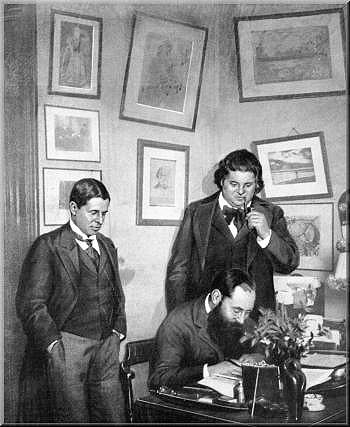
Magnard (left) with his colleagues Eug???ne Ysaye (back) and Guy Ropartz
Source: Timpani CD (my rip!)
Format: mp3, 320k/s (CBR), DDD Stereo
File Size: 166 MB
Download Link (re-up) – https://mega.co.nz/#!YUZ2EDIb!EiO5RUNKBNy1gkny-TZnIWEEW5EB8Bu6-QWMtvUKJl4
Enjoy! Don’t share! 🙂
Toivo Timoteus Kuula (7 July 1883 – 18 May 1918) was a Finnish conductor and composer. He was
born in the city of Vaasa (in those days Nikolainkaupunki), when Finland still was a Grand Duchy under
Russian rule. He is known as a colorful and passionate portrayer of Finnish nature and people.
In 1909, Kuula became Jean Sibelius’s first composition student. He is best remembered for his large output
of melodic choir and vocal works. His instrumental works include two Ostrobothnian Suites for orchestra, a
violin sonata, a piano trio, and an unfinished Symphony. Kuula’s major choral work is the Stabat Mater,
which remained unfinished at the time of his death. He also wrote a few dozen highly artistic piano works.
A Swedish critic once said that Kuula’s music reaches parts of the human spirit where one is forced to deep
examination of one’s self.
Kuula was known to be a fierce Fennoman. He died in the provincial hospital in Viipuri in 1918 after being mortally
wounded 18 days earlier on Walpurgis Night by a bullet fired by a J???ger. The bullet was fired as a result of a quarrel
that happened at the Hotel Seurahuone in conjunction with the first victory celebration of the White victory
in the Civil War of Finland. Kuula is buried in Hietaniemi cemetery, Helsinki.
Wikipedia
Music Composed by Toivo Kuula
Played by the BBC Concert Orchestra
With Susan Gritton (soprano)
Conducted by Martyn Brabbins
"You might have thought that Bis or Ondine would have been first off the blocks with a collection of the
orchestral music of Finnish composer Toivo Kuula. As it is, deep respect and healthy sales should greet
Dutton in branching out in this direction as well as towards France and Benjamin Godard. Perhaps it took
the catharsis and expiation offered by Bis’s now complete Sibelius Edition to offer the oxygen for a project
such as this. Pingoud, Raitio and Melartin have hardly been ignored but perhaps we will now see yet
more of their music appearing and in multiple performances.
The Sea Bathing Nymphs – the same as Sibelius’s Oceanides? – is a grandly luxurious scena in the manner
of Richard Strauss and Sibelius’s Luonnotar. It lacks the dissentient originality of the Sibelius but is striking
all the same. The words are sung by Susan Gritton around writing that is magically fine and delicately spun
with occasional eruptive climaxes worthy of Schulhoff, Schreker or Zemlinsky. Summer Evening has a hymn-like
simplicity – like a national favourite. Long I stared into the Fire was orchestrated by Aarre Merikanto. It partakes
of The Swimmer from Elgar’s Sea Pictures and RVW’s Stevenson settings. In the Cattle Yard reminded me of
the sheep-calling songs spread across Canteloube’s Chants d’Auvergne. Then comes a song of great magical
ambit, Sailing in the Moonlight. It superbly catches the lunar light playing on barely stirred waters yet is still
very passionate in the manner of The Seabathing Nymphs. The Maiden and the Son of a Slave is another
silkily spun mercurial song with a volatile and highly demanding vocal part – one can imagine this music being
beloved of William Baines – it rather reminds me of his two neglected and unrecorded masterworks Thoughtfdrift
and Island of the Fey but with a petrol-soaked fulminant vocal element.
The Son of a Slave ( Orjan Poika) I have known for some years from a friend’s broadcast tape by Jussi Jalas.
It is a romantically impressionist piece in which the canvas is diaphanous and rather Sibelian in a gentle
elusive way – lovely music.
The South Ostrobothnian suite No. 2 is in five movements. The music is jaunty-folksy (I III) and eldritch and
nature mystic ( It Rains in the Forest). The latter is distinctly Sibelian as is the oboe-led Polka of the Orphaned Children,
The last movement is challengingly called Daemons lighting up the Will-O’-The-wisp. It too has its Sibelian
moments as in the closing pages where this could easily have been from Sibelius’s theatre music.
Lastly comes the Prelude and Fugue of 1909, reminiscent at times of Sibelius’s Karelia suite. It’s jolly and
stormy at first in the manner of Liszt. Then comes a tautly pattering little fugue running to almost six minutes.
This might with advantage have been placed before Orjan Poika so the disc could have played out to Kuula’s
staunchly imaginative romantic strengths rather than a patterned exercise reeking of the academic. Still, this is
a most fascinating issue and one that those holding a torch for Scandinavian music will have no
choice other than to hear."
Music Web
Source: Dutton Epoch CD (my rip)
Format: mp3, 320k/s (CBR), DDD Stereo
File Sizes: 167 MB
Download Link (re-up) – https://mega.co.nz/#!tFpnnDhT!Z9XrpX6iWB8yH5y8SFU20yAdLckqqrU9VwVbjEF 1pMU
Enjoy! Don’t Share! 🙂
This is my final upload for a week. Have fun with the 96 entries so far! 🙂
Thanks for sharing!
All your uploads are very much appreciated!
Rued Langgaard had one of the most remarkable careers – and was perhaps the greatest musical talent – in all of Danish music.
Rued Langgaard was brought up by his artistic parents to hold arch-Romantic, religio-philosophical views on art. Yet Langgaard
was not deaf to the modern development of music, and took his Late Romantic tonal idiom to such highly original extremes that
it could no longer maintain its Romantic grounding. This led to the first of the two long pauses in composition in his life, and to a
subsequent output of works that were deliberately anachronistic.
The Danish music world looked askance at Rued Langgaard, a lonely eccentric who was the only Dane to go all the way with
Late Romanticism. In 1940 he was engaged for the first time in an official capacity, as the cathedral organist in Ribe, far from
the music life of the capital. And there he lived, a bitter man, until his death, regarding Carl Nielsen as the epitome of all that
was wrong with the music of the age. Nevertheless, one finds traces of Nielsen in the most modernist works of Langgaard.
Rued Langgaard wrote over 400 works of which numerous are recorded for Dacapo: The 16 symphonies and many other
orchestral works, the six string quartets, piano and organ works, choral music, songs and the religious vocal drama Antichrist.
It was only at the end of the sixties that eyes were opened to the quite special qualities of his often unique musical idiom.
And there are still great works by Langgaard awaiting their first performance.
Dacapo Website
This is a precocious 1st Symphony, a large scale programmatic work that is the composer’s answer to
Richard Strauss’ similarly themed An Alpine Symphony.
Music Composed by Rued Langgaard
Played by the Danish National Radio Symphony Orchestra
Conducted by Thomas Dausgaard
"Rued Langgaard, having criticised his fellow Danish composers for their slavish adherence to
modernism, was abandoned to plough his own very Late Romantic furrow. Something of a Wunderkind,
he never managed to succeed to the same extent as his near contemporary, Erich Korngold, although
ironically there are many passages where his music recalls Korngold. Wagner, Gade, Tchaikovsky, Liszt
and Richard Strauss are other very obvious influences in his music. Langgaard believed that music had a
meaning beyond mere notes, in a religious sense. He sought to add programmes to much of his music in
order to aid the listener’s grasp of this meaning, taking Richard Strauss’ programmatic works to another
level. However, since music is a very imprecise art-form for describing places and events, it is perhaps
best to note the composer’s inspiration and then let the music take you where it will.
The First Symphony, rarely played and recorded, is an astonishing achievement. Langgaard was 15 years
old when he started it, 20 when it was finished after a period of revision. Its 5 movements describe a walk
from a rocky shore in Sweden up to a mountain peak, a clear reference to Strauss’ Alpine Symphony. Curiously,
the work bursts upon the listener with a blaze of majestic sound celebrating the surf, while it ends on a note
of contented accomplishment, almost the opposite of Strauss’ glorious peroration at reaching his summit.
Even at this early stage, the sheer confidence and textural awareness of the young composer as a superb
orchestrator is astonishing. Dausgaard simply gives Langgaard his head but manages to control the intense,
saturated writing and massive volume of the climaxes which almost roll over one another. With a lesser
conductor and orchestra, such rhapsodic and intense music could become overbearing or overwhelming.
The indefatigable Danish National Symphony Orchestra are almost pushed to their limits, but respond
magnificently, revelling in the torrents of sound they emit but still producing lovely solo work (especially
woodwind) at the more reflective moments. There are some flaws in the work, as expected from an
inexperienced symphonist. For example, the coda of the first movement seems interminable, despite
Dausgaard’s well-paced containment of its volume and strength.
The recording is very good, although the orchestra is placed somewhat far back in a reverberant hall.
In a way this is a good thing as it allows the huge climaxes to expand nicely, but the acoustic is hard
rather than warm, so passages with high strings and added piccolo as in the last movement can sound
a little glassy. Chandos managed a warmer acoustic for Segerstam’s version of the First Symphony on
RBCD. However, played at a good volume, the sound can be quite spectacular, with a very natural
concert perspective.
If you like the sound of a large orchestra playing melodious Romantic music with great conviction, this
is well worth seeking out. It certainly rewards repeated listening. Langgaard’s biographer provides
excellent notes on the composer’s attitude to the symphony in general and the genesis of the
First in some detail."
SACD Net
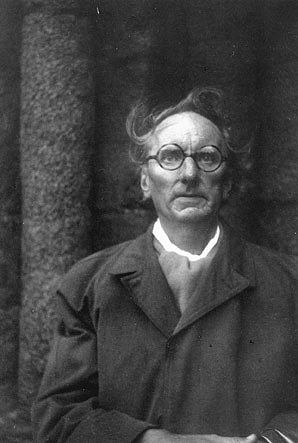
Rued Langgaard was a loony – only for a time, he was a happy loony
Source: Dacapo CD (my rip!)
Format: mp3, 320k/s (CBR), DDD Stereo
File Size: 150 MB
Download Link (re-up) – https://mega.co.nz/#!JMBxSayJ!QtUI-BQzwMYj_sePb8hC7grk325TSP5LVd6m1AlSE1E
Enjoy! Don’t share! 🙂
Two rather different ballets inspired by Bram Stoker’s Dracula: one by the British composer
Philip Feeney, which employs a small orchestra in a neo-romantic idiom, which makes it sound closer to an
actual film score (thanks to Feeney’s ingenious orchestrations, the sound he gets is much bigger than the
smallish ensemble of 26 players may suggest). The other, by American composer Anthony DiLorenzo, exists
in two different versions: One for orchestra, and a 50-minute suite for brass septet and added solo instruments, recorded here.
The result is a leaner, occasionally almost Weill-ish sound. It should be noted that DiLorenzo is himself a virtuoso trumpeter,
so his competence in writing for this particular ensemble is high. Both ballets are interesting, if maybe the Feeney is altogether
more colorful, the DiLorenzo more enterprising in its sound world.
Music Composed by Philip Feeney
Played by the Northern Ballet Theatre Orchestra
With Pauline Thulborn (soprano)
Conducted by John Pryce-Jones
Music Composed by Anthony DiLorenzo
Played by Proteus 7, with guests
"Philip Feeney (b.1954) spent his early years on the Isle of Wight, going on to study composition
at the University of Cambridge with Robin Holloway and Hugh Wood, and subsequently at the Accademia di
Santa Cecilia in Rome under Franco Donatoni. His works have been performed extensively worldwide and he
is most noted for his work in Ballet and Dance. After a period as pianist/composer for the Teatrodanza di Roma
from 1980-84, he returned to London and has been composer in residence for Ballet Central and Musical Director
for their national tour ever since. From 1991-95 he lectured in composition at Reading University.
As a pianist, Philip has worked with many companies, including Northern Ballet Theatre, the Gulbenkian Company,
Birmingham Royal Ballet, London Contemporary Dance Theatre, Rambert Dance Company, Carlos Acosta, Adventures
in Motion Pictures, White Oak Project and the Martha Graham Company. Apart from over forty scores he has
composed for Ballet Central, he has collaborated with many different choreographers including William Louther,
Jane Dudley, Christopher Gable, Michael Pink, Didy Veldman, Michael Keegan-Dolan, Derek Williams, David Nixon,
Adam Cooper and Sara Matthews.
His long-standing association with Northern Ballet Theatre began in 1987 with Memoire Imaginaire which initiated
a prolific collaboration with choreographer Michael Pink, which went on to produce Strange Meeting and Danse Classique.
In 1993 he was commissioned to compose Jazz Concerto for choreographer Derek Williams. His first full-length
production for NBT was Christopher Gable’s Cinderella, and it was for Gable and Pink that in 1996 he wrote the highly
acclaimed score for Dracula. This was closely followed by the music for Michael Pink’s The Hunchback of Notre Dame (1997).
All three ballets have been recorded on CD. While writing the score for The Hunchback of Notre Dame, he composed
the music for Didy Veldman’s Greymatter for Rambert Dance Company, with designs by Lez Brotherston.
Both Dracula and The Hunchback of Notre Dame were presented by Atlanta Ballet at the Fox Theatre in the 1998 and 1999
seasons, and subsequently by the Royal New Zealand Ballet and Colorado Ballet, where it regularly appears in the company’s
repertoire. Furthermore Hunchback has been performed by Boston Ballet in 2002 and Milwaukee Ballet in 2004 and Dracula
was produced in Oslo by the Norwegian Ballet in 2001."
Feeney bio
"Anthony DiLorenzo arranged this suite of highlights from his full-length Dracula ballet for the ensemble Proteus 7.
Primarily a brass ensemble (of which DiLorenzo is leader and first trumpeter), the group is here augmented by woodwinds,
percussion, and some really cool instruments including a Theremin, Bass Waterphone, and Daxophone. The latter is a piece of
curved wood (with an implanted microphone) played with a bow, which produces some horrific roaring sounds. All of this
makes for a deliciously spooky atmosphere, but it’s not all ghost and goblin effects–there’s plenty of real music going on.
DiLorezno has composed music for ABC-TV as well as trailers for more than 70 movies, and it shows in the brilliant and
exciting brass writing (some of the more dramatic passages remind me of the old Mannix television series).
However, the score heavily relies on waltzes and other classic dance forms, and there is a romantic, gothic sweep that
informs the whole project. Elements of jazz make a welcome contribution as well, including atmospheric use of the marimba.
The playing, as you would expect of such a devoted group of musicians, is simply brilliant–cutting-edge in its virtuosity.
In short, this disc is a barrel of fun! Dorian’s amazing 24-bit recording and xCD technology reach new heights of realism,
so much so that some listeners may consider upgrading their equipment, happily a less expensive proposition these days."
Victor Carr Jr, Classics Today http://i1084.photobucket.com/albums/j415/wimpel69/p10s10-1.gif
Source: Naxos & Dorian Recordings CDs (my rips!)
Format: mp3, 320k/s (CBR), DDD Stereo
File Sizes: 170 MB (Feeney – with booklet) / 113 MB (DiLorenzo)
Download Links (DiLorenzo, re-up by Herr Salat) – https://mega.co.nz/#!0RdQlIhR!XKqcXyUJbkJird_by7Ak2ySPOUBHTzfufTrUlru racM
(Feeney, re-up by Herr Salat) – https://mega.co.nz/#!UcFzDJiT!P2ke0hi575F4vmUgFAHbLxlOYQs7Ro6ZKke7nDT 1cOw
Enjoy! Don’t share! 🙂
Arnold Rosner is a neo-tonal Jewish American composer whose works have been mostly performed by so-called
"regional orchestras" in the United States. His style embraces early 20th century modernism, but shies away from the
innovations of post-WWII serialism or minimalism. Included in this collection are A Sephardic Rhapsody, which might one
remind of Ernest Bloch’s Hebrew works (or, again, R???zsa), a suite from the opera The Chronicle of Nine
(the Jane of the Tragedy of Jane Suite being the "Queen of Nine Days"), a festive Millennium Overture and a
neo-classical Concerto for Two Trumpets, Strings and Timpani. This is all polished,well-crafted "traditional"
symphonic music, albeit in occasionally less-than-polished performances (there are no alternatives anyway).
Music Composed by Arnold Rosner
Played by the Owensboro & Altoona Symphony Orchestras
With Jonathan Martin & Robert Murray (trumpets)
Conducted by Nicholas Palmer
"I have previously sung the praises of the music of Arnold Rosner. I am pleased to have the excuse to do that again in
reviewing a disc given over to Rosner’s orchestral music. Encouragingly the disc is marked ‘Orchestral Music of Arnold Rosner – Volume I’.
Both the Sephardic Rhapsody and the Overture spring from Rosner’s long association with the conductor David Amos. The Millenium Overture
is an orchestration of the final movement of Rosner’s 1990 Cello Sonata No. 2. The brass are commandingly to the fore in a work that is
quick-witted, emotional and restless. It has his trademark exotic flavour, a galumphing almost brutal rhythmic punctuation mixed
with Gabrielian work for the whole brass complement.
A Sephardic Rhapsody has that Mozarabic curve and sway to the tunes heard instantly in extensive writing for solo strings and trumpet.
The lines and their treatment impart dignity and reserve without being emotionally stilted. It is somewhat in the same line as Hovhaness
but much more is going on in Rosner’s music. The music also touches base with works such as Vaughan Williams’ Flos Campi and
Rozsa’s Tripartita.
After those two works we move to the Owensboro orchestra for the three movement Concerto for Two Trumpets. Strings and Timpani.
This is virtuosic, free from jazziness, infused with dignified hieratic eloquence and the drama of ritual. The antiphonal effects are
superbly captured in this recording. The concerto was written for Ted McIrvine and Bruce McKinney (both composers and trumpeters).
This recording is dedicated to Ted’s memory – he died of bone cancer in 2000.
Finally we come to the substantial four movement suite The Tragedy of Queen Jane. This is a suite from the music Rosner
wrote for the opera The Chronicle of Nine, on a play by Florence Stevenson. The suite opens with a grave soliloquy called Prelude.
This is very close in feel to Vaughan Williams’ Tallis Fantasia leavened with rising harp figures and fearsome brass passages in what
we now recognise as Rosner’s distinctive super-Baroque style. Here however the brass is edgy with panic or insurrection.
The Masque has an antique feeling which transforms a theme rather related to Vaughan Williams’ Greensleeves Fantasia with the
sort of grandeur to be found in Reger’s Baroque experiments. In the opera this is the wedding music. The Clarion movement is
belligerent; indeed in the opera it refers to the skirmish in which Queen Jane’s forces are driven off. The Dirge has one of those
massive uprooting fanfares – touched with catastrophe and restive with tragedy. In the opera this forms the Act II prelude.
Rosner says that we may think of it as a dirge for Jane.
Rosner’s music packs a powerful emotional punch – and it is instantly recognisable, with its glowering and gaunt brass and
calmly placid and elysian string writing. We need to hear more please."
Music Web
Source: Albany Records CD (my rip!)
Format: mp3, 320k/s (CBR), DDD Stereo
File Size: 162 MB (incl. cover & liner notes)
Download Link (re-up) – https://mega.co.nz/#!lRAwQLYB!SbQCr0QR4q0v5ElIMkw06hQczgg793m_ZjqzpE-8ZBI
Enjoy! Don’t share! 🙂
Lord Berners (1883-1950) was one of the most idiosyncratic and fascinating personalities in British music.
He became a pioneer in the avant-garde when he wrote his first music whilst living in Rome as a diplomat during
World War I; Balanchine choreographed his first two ballets and Ashton the next three; in 1931 he had the first
exhibition of his paintings; in 1934 he published the first volume of his autobiography, First Childhood, and two
years later his first novel, The Camel – and three more novels came out in 1941. On top of all this during the 1930s,
known as ‘the versatile peer’, he increasingly gained a reputation as an eccentric, which he realised was good for
publicity. His paintings all sold and some of his novels were translated into French and Swedish: all are now back in
print. But it was his music that meant the most to him and, largely through the endeavours of Philip Lane, all
of it is available on CD.
Because Berners was admired by Stravinsky, was commissioned by Diaghilev, wrote his ballet A Wedding Bouquet
to a text by Gertrude Stein (designing the costumes and sets himself), he associated with some of the leading
international figures in the arts. He kept a house in Rome but increasingly held court at Faringdon House (then Berkshire,
now Oxfordshire) as a centre for his legendary surrealist activities such as dying the pigeons various colours and
building a useless Folly on the hill outside Faringdon against local opposition in 1935. Between the wars he attended
musical events across Europe but World War II was a disaster that threatened everything he valued: he was at heart
a European at home in various languages. Berners barely recovered from the war, although he wrote his last ballet
and some film music afterwards.
His music has never been completely neglected but there was a lean period after his death in 1950 until the revival
concert at the Purcell Room in 1972, with John Betjeman giving readings: this was broadcast and led to some first recordings.
There was more activity for the centenary in 1983 with London concerts, published volumes of songs and piano music,
and a BBC Radio 3 documentary that became a book: Lord Berners: Portrait of a Polymath (Boydell 2008). Through the
1990s more recordings appeared, including Berners’ only opera. Then Berners acquired a new audience through Mark
Amory’s lively biography, Lord Berners: the Last Eccentric (Chatto and Windus 1998), and the coinciding reprints of
the autobiographies and the novels in the Collected Tales and Fantasies (Turtlepoint Press/Helen Marx Books). Gerald
Berners was actually the 14th Baron Berners – it wasn’t just a showbiz title as his friend and colleague Constant Lambert
had to explain in America – and when he inherited in 1918 he became rich. That made him look like a dilettante but Stravinsky
recognised that if Berners was regarded as an amateur because he had no need to earn his living from the arts it was
‘in the best – literal sense’ and nothing he ever did was amateurish. A wry humour pervades everything, as the brilliant
orchestral Fantaisie Espagnole and Three Pieces abundantly show. His songs and piano music, too, are as full of whimsical
references as those of Satie – he has been called the English Satie and the Ronald Firbank of music. Berners was not prolific
but whatever he did was stamped with his own fastidious accomplishment. He may not have been the last eccentric but his
music makes him one of the most rewarding.
Peter Dickinson
incl. The Triumph of Neptune (complete), The Man with the Moustache, Valses Bouregoises, Les Sir???nes (complete),
Cupid and Psych??? (Suite), Caprice P???ruvien, Wedding Bouquet (complete) & Luna Park (complete)
Music Composed by Gerald Tyrwhitt-Wilson, the 14th Baron Berners
Played by the English Northern Philharmonia, Royal Ballet Sinfonia & RT??? Sinfonietta
With Miriam Blannerhassett (contralto) & The RT??? Chamber Choir
Conducted by David Lloyd-Jones & Kenneth Alwyn
"Lord Berners is, understandably, the short form of the honorific attending to English baron the Right Honorable
Sir Gerald Hugh Tyrwhitt-Wilson. Berners was most things a man of peerage should not be — he was unambitious,
uninterested in the diplomatic corps for which his rearing prepared him, and "worst" of all, a musician. Marco Polo’s
Lord Berners: The Triumph of Neptune features conductor David Lloyd-Jones in a program of ballet, theater, and film
music of Lord Berners in works stretching from his early "futurist" period of 1918 to a more germane, but still sharply
hewn, stylistic idiom dating from the Second World War.
The most fascinating work here is L’uomo dai baffi (1918; The Man with the Moustache), incidental music composed for
a marionette theater performance organized by Italian futurist Fortunato Depero. Berners’ score, made for a tart-sounding
chamber orchestral combination, is occasionally reminiscent of Stravinsky, though other parts are reminiscent of music that
Luigi Dallapiccola would be writing 30 years hence. One could argue that Berners was writing Italian futurist music that Italian
futurist composers, such as Balila Pratella, should have been writing owing to their own aesthetic precepts, but didn’t. Berners’
compositional style had managed to shed most of its biliousness by the time of the ballet The Triumph of Neptune in 1926,
but his music retained plenty of its salt. This, and his penchant for near-cinematic turns of phrase, prevents The Triumph of Neptune
from being purely neo-classical. The ballet contains its moments of lyricism, as well, particularly in the cue "Cloudland." The storyline
for The Triumph of Neptune is wonderfully nonsensical in manner of Cocteau’s libretto for Satie’s Parade; numbered among the
original dancers in the premiere were Alexandra Danilova, Serge Lifar, and George Balanchine. It must have been a handsome
production, indeed, and if you close your eyes as you listen to this music you can almost see it. Marco Polo’s excellently well-engineered
recording and Lloyd-Jones’ disciplined, clearly articulated reading make the visual effect all too clear.
The Valses bourgeoises (1919) are also early, but are parodies of pre-existing pieces; for example the third waltz is titled "Strauss,
Strauss et Straus." Polka (1941), although composed independently, was ultimately used in the Ealing film Champagne Charlie (1944);
it sounds like a polka jointly composed by Bernard Herrmann and Danny Elfman. Despite that, Lord Berners had only limited direct
contact with film, and that limited to a part of his life ultimately claimed by advanced depression; his non-futuristic music is visual in feel.
Marco Polo’s Lord Berners: The Triumph of Neptune has a great deal more of a general audience appeal than this modest disc, and the
continued obscurity of Berners himself, would suggest at first glance. Even though it’s not film music, if you love film music most likely
you will love most of this; likewise, if the music of William Walton or Constant Lambert appeals to your ears, then Marco Polo’s
Lord Berners: The Triumph of Neptune will not be far off those marks."
Dave Lewis, All Music
Source: Marco Polo CDs (my rips!)
Format: mp3, 320k/s (CBR), DDD Stereo
File Size: 466 MB (3 CDs, incl. covers & booklets)
Download Link (re-up) – https://mega.co.nz/#!BAJSWZhQ!GRQoqgpgwmDBMeG1WxCNCVK1UF8AfKkOy-rS8BwbLQk
Enjoy! Don’t share! 🙂
I hope you enjoyed the first 100 uploads, featuring some 108 CDs (incl.contributions by American Idiot and dj???houty).
As before, please do not post these rips anywhere else, and if at all possible, do buy the original CDs or lossless downloads. Cheers, wimpel69 🙂
Jean Cras is another all-too-easily overlooked French composer caught between late 19th century Romanticism and the new impressionistic
style of Debussy’s mature works. Like Albert Roussel, he was a naval officer, so in his tripartite Journal de bord (The Ship’s Log), he
knows what he’s "talking" about. It’s a glittering, shimmering seascape with many deft touches, quite "La Mer II", as some Amazon reviewer wrote.
The other work, ???mes d’enfants (The Souls of Children), is another three-part work, one character piece each for Cras’s own daughters.
The style, as could be expected, is a little more direct, more openly romantic than in the sea piece. Very well crafted music indeed. Too bad
Cras wrote very little in his life.
Music Composed by Jean Cras
Played by the Orchestre Philharmonique du Luxembourg
Conducted by Jean-Francois Antonioli
"Jean ???mile Paul Cras (French pronunciation: [ʒɑ̃ kʁaz] (22 May 1879 – 14 September 1932) was a
20th century French composer and career naval officer. His musical compositions were inspired by his native
Brittany, his travels to Africa, and most of all, by his sea voyages. As a naval commander he served with
distinction in the Adriatic Campaign during World War I.
Cras met Henri Duparc, the famous French composer, early in his career, and the two became lifelong friends.
Duparc called Cras "the son of my soul". Though Cras’s duties in the French navy left him little time to devote
to his musical work he continued to compose throughout his life, mainly writing chamber music and songs.
Much of his most ambitious work, the opera Polyph???me, was written and orchestrated during the war, however
the majority of his musical output dates from after the war. Today, his string trio and string quartet are his
best known works.
His lyric tragedy, Polyph???me is considered his masterpiece. The opera was acclaimed at its premiere in 1922,
giving Cras a burst of notoriety in the French press. The title character is Polyphemus, who, according to Greek
mythology, is the eldest Cyclops and son of Poseidon. It tells the well-known story of the attempt by Polyphemus
(baritone) to steal Galatea (soprano) from Acis (tenor). In the original myth Polyphemus eventually kills Acis by
rolling a rock onto him. Albert Samain, the librettist, humanized Polyphemus by having him become aware of the
feelings shared by two lovers and thus, decide not to crush them. Ultimately, the cyclops wanders into the sea
to find death because the couple’s happiness horrifies him. The music is impressionistic, restless, and highly
chromatic, in the spirit of Chausson and Duparc. The influence of Debussy’s opera Pell???as et M???lisande is also
noticeable.[2] (A fine recording of this opera was released in 2003, with Bramwell Tovey conducting the Luxembourg
Philharmonic Orchestra and Armand Arapian in the title role.)
Cras’s later work developed a more acerbic style comparable to that of Bart???k, though formally close to C???sar Franck.
He considered chamber music to be his forte, writing that "this refined musical form has become for me the most
essential". The String Trio in particular integrates a wide range of styles, including North African influences. It was a
described as a ‘miraculous’ work by Andr??? Himonet in 1932, achieving "perfectly balanced sonority and a plenitude
of expression between which one dare not choose." The Trio for Strings and Piano also blends African and Eastern
melodic patterns with Breton musical traditions into a coherent whole. The critic Michel Fleury compares his work
to the Japonist style of the artist Henri Rivi???re revealing "a stylised Breton land, as though it had been passed
through the sieve of his varied experiences gained in the four quarters of the globe."
Wikipedia
Source: Timpani CDs
Format: mp3, 320k/s (CBR), DDD Stereo
File Size: MB
Download Link (re-up) – https://mega.co.nz/#!Dth2maBR!eLF-x24qY0oOjvQThtm563LiZ3Z2Jwr3K9VCtoT0ktU
Enjoy! Don’t share! 🙂
* NOTE: The re-up now includes the second CD, featuring Cras’s Piano Concerto and L???gende for Cello and Orchestra, too.
Belgian composer Lodewijk Mortelmans (1868-1952) was a contemporary of Paul Gilson, and, like him,
he was an important teacher and signature figure in the Belgian music revival of the first quarter of the 20th century.
As a composer, he was still very much influenced by the Russian romantics like Glazunov (a parallel, again,
to Gilson’s style), which is immediately evident in his large-scale, programmatic Homeric Symphony. The four
standard movements represent the composer’s own response to Homer’s The Iliad. The two other works are much
less ambitious in scope, but also more individual and "advanced": Morning Mood and, notably, The Myth of Spring.
Music Composed by Lodewijk Mortelmans
Played by the Royal Flemish Philharmonic Orchestra
Conducted by Martyn Brabbins
"Lodewijk Mortelmans belongs to a select group of Flemish composers who contributed much to late
romantic orchestral music from the end of the nineteenth century onwards. The names Mortelmans, De Boeck,
Blockxx and Brusselmans among others will be well-known to perusers of Marco Polo’s lists, as well as those of
the Discovery label, without whom these composers would have, until now, remained footnotes in musical history.
In 1893 Mortelmans won a prestigious music prize in Belgium and used the money accompanying the prize to widen
his horizons in Germany and Italy, and later founded a music society in Antwerp which invited guests such as
Richter, Strauss and Mahler. It would be a mistake to categorise Mortelmans and his circle as parochial and insular,
as Tom Janssens in his extensive and excellent essay in the accompanying booklet makes clear.
“Mythe der lente” (Myth of Spring) was written in 1895 with references to Edda (as is Jon Leif’s monumental work,
Part 1 of which is available on a BIS SACD), portraying the waking of Gerda after the winter sleep and
meeting her bridegroom, Freya.
By 1898 Mortelmans had completed his substantial Homeric Symphony, a 45 minute cornucopia of late romantic delights.
With Wagnerian and Straussian inspiration the composer’s command of orchestration is impressive, with some especially
fine writing for horns. There’s a grand first movement, followed by a second slow movement with heartfelt memories of
Patroklos’s death. The contrast in the third movement is startling, a gossamer-light scherzo depicting the Sirens playing
and singing, Janssens finding this rather less successful than I did. It’s a gorgeous sound, and beautifully played, too.
A fine, triumphant fourth movement completes this interesting and diverting work.
“Morgenstemming” (Morning Mood) completes the CD’s programme, a later work from 1922, the first orchestral work
Mortelmans completed after the Homeric Symphony. This is a more abstract, more Delian less Wagnerian work,
Mortlemans’ equivalent of Nielsen’s Helios Overture.
This CD marks a new departure for Hyperion, starting their link with the Royal Flemish Philharmonic under their relatively
new principal guest conductor but old Hyperion hand Martyn Brabbins. This is a fine orchestra, capable of silky smooth
string playing where necessary, and excellent in all departments. Brabbins steers a clear path avoiding the mundane on
the one hand, and the over-egged romantic hysteria on the other, and his orchestra, from the end result, seem to me
to have enjoyed the music making hugely. These are no idle run-throughs – ensemble is tight, dynamics are carefully
graded and the result is some intense music-making."
Audaud
Source: Hyperion CD (my rip!)
Format: mp3, 320k/s (CBR), DDD Stereo
File Size: 144 MB (incl. booklet)
Download Link (re-up) – https://mega.co.nz/#!kJ4B0RYa!O8TEHEkS-wM-cvuiHfTxbQ0SJKVN7BG3VL8LnlUsAUk
Enjoy! Don’t share! 🙂
No.103
"Ingolf Dahl left Germany (where he was born of Swedish parents) before World War II. After having become an
established and highly regarded teacher and composer in America, he returned to Europe on sabbatical from the
University of Southern California in 1952 and 1953. In a church in the Austrian town of Schruns he found images
of Saint Barbara, an early Christian martyr. Barbara, a Christian convert, refused the orders of her father, the king,
to accept a marriage he had arranged and to renounce her new faith. As a result, she was imprisoned in a tower,
tormented by the people’s anger, and finally slain by her father’s hand.
Dahl decided to use her legend as the basis for a ballet. However, he could not interest choreographers in it, and
it was never staged. Recast as a "Symphonic legend in four parts" The Tower of Saint Barbara was first
performed by the Louisville Orchestra under Robert Whitney on January 29, 1955; its now-standard revised version
was finished in 1960. The four movements are called "Barbara," "The King," "The Tower" and "The Martyrdom." Dahl
established two sound-worlds in the 24-minute piece: Barbara’s mystical and contemplative music is given chromatic
lines but predominantly consonant harmonies, while the heathens led by the king received diatonic music with much dissonance."
All Music
Also included are several excellent, non-programmatic works: The Saxophone Concerto, the Music for
Brass Instruments, and a Hymn for orchestra. Another unjustly neglected American composer …
Music Composed by Ingolf Dahl
Played by the New World Symphony & Brass Orchestras
With John Harle (saxophone)
Conducted by Michael Tilson Thomas
"Ingolf Dahl was born in Germany to a Swedish family. He studied with Philipp Jarnach at the Conservatory
in Cologne, Germany, but left Germany when the Nazis took over. He continued his studies in Switzerland
at Zurich Conservatory with Volkmar Andreae and at the University of Zurich with Walter Frey. In 1935 he
visited the United States to study with Nadia Boulanger, who was then teaching in California. Seeing the
European situation became more unsettled, he moved permanently to the United States and took up
residence in Los Angeles. He became successful as a film and radio arranger, and he also composed,
conducted, and gave lectures.
Dahl was particularly successful in his role as conductor and pianist of concert series called Monday Evening
Concerts and Evenings on the Roof. These programs, featuring contemporary music, attracted the attention
of composer Igor Stravinsky, who employed Dahl as a musical assistant. He entrusted the translation of
his Norton Lectures into English to Dahl.
Dahl became highly respected as a professor at the University of Southern California, whose faculty he joined in
1945. He was a longtime conductor of the university’s orchestra (1945 – 1958) and taught both conducting
and composing. Among his pupils are conductor Michael Tilson Thomas and composer Frederick Myrow.
His own music evolved from a thickly scored Central European style, with considerable Hindemith-influenced
counterpoint, to a more American style, open and lighter in scoring with a brisk neo-Classical element influenced
by Stravinsky. The bulk of his relatively small output is instrumental. His music is usually tonal, although he wrote
a few serial or twelve-tone pieces. He is especially well regarded among wind instrumentalists for his compositions
for band and other wind ensembles, and for his saxophone concerto, his concerto for two clarinets, his Allegro
and Arioso for woodwind quintet, and his Music for Brass Instruments.
In addition to teaching at USC (with which he remained affiliated until his death), he also taught at Tanglewood
and was director of the Ojai Festival, The Young Musician’s Foundation of Los Angeles, and the Los Angeles
Guild Opera Company. He received numerous honors and awards, and inspired great devotion from his pupils."
All Music
Source: Decca Argo CD (my rip!)
Format: mp3, 320k/s (CBR), DDD Stereo
File Size: 165 MB
Download Link (re-up by Herr Salat) – https://mega.co.nz/#!0IsnxZYJ!Xg2FD395jx2ENyES39ttjwjcgHps5NtepebD1Zy OeEQ
Enjoy! Don’t share! 🙂
Mikolajus Konstantinas Čiurlionis was born at Varena in southern Lithuania in 1875, the son of an
organist. From the age of fourteen he studied at the music school in Plunge, acquiring a knowledge of
various instruments, following this in 1894 by a period at the Warsaw Music Institute as a piano pupil
eventually of the widely cultured Antoni Sygietynnski. He later studied composition with Zygmunt Noskowski,
whose pupils included Szymanowski and Fitelberg, and went on to further study of composition in Leipzig
with Liszt’s pupil Salomon Jadassohn and Carl Reinecke. In 1902 he began to develop another aspect of his
talent when he entered the Warsaw Drawing School, moving two years later to the newly established
School of Fine Arts, and exhibiting in Warsaw in 1905 and in Vilnius, where he made his home in 1907.
As a painter he won posthumous success with exhibitions in Warsaw, Vilnius and
St. Petersburg soon after his death.
The symphonic poem The Sea (Jūra) was started in 1903 and completed in 1907.
In texture it has about it more of Richard Strauss than of Debussy, although the orchestra is
handled with sensitivity to produce an overtly pictorial effect, much as some of the paintings of Čiurlionis
had been conceived in quasi-musical terms as pictorial sonatas. The sea is shown in a variety of moods,
gentle, lyrical, running deep and rising to a climax of grandeur.
The shorter symphonic poem In the Forest (Miške) was written in 1900, before the
departure of Čiurlionis for Leipzig. It is tempting once more to hear parallels with contemporaries, with
Sibelius in Finland in mood, and with composers of Germany in a skilled and colourful use of the orchestra
in music that is evocative but never merely narrative.
The Five Preludes arranged for string orchestra were originally written for piano, a reminder of
the distinction of Čiurlionis both as a performer and as a composer for the keyboard, and a reminder,
too, of the contemporaneous work of Szymanowski in this vein.
Naxos
Music Composed by Mikolajus Ciurlionis
Played by the Slovak Philharmonic Orchestra
Conducted by Juozas Domarkas
"First of all, I would like to say that I was greatly rewarded by dicovering and listening to Ciurlionis’s music. The reason for
his obscurity remains unknown to me. The only thing that comes to mind is that his compositions are few. Of course, Ciurlionis
was also a great painter, in which he combined musicality to his drawings. The music on the disc: The Sea (symphonic poem)
is the star component of this disc. The melodies, harmonies and orchestrations are all very lush. This is also my personal
favorite. In the Forest (symphonic poem) is a very beautiful piece of music (and a student work to add). Though Ciurlionis
was not as experianced with the musical language when he wrote this work (comparing this to his second symphonic poem
The Sea), it is an assured winner for the listener. The Five Preludes for String Orchestra were all arranged from some of his
shorter piano pieces. Though they are all brief, they contain some very attractive melodies. All-in-all;this recording is
essentially classic. The sound produced from the Orchestra and the recording are both satisfying. After hearing this
recording, you and I will both agree that there needs to be more recordings of this unknown master’s music. Enjoy!"
Amazon Reviewer
Source: Marco Polo CD (my rip!)
Format: mp3, 320k/s (CBR), DDD Stereo
File Size: 110 MB (incl. covers, liner notes)
Download Link (re-up) – https://mega.co.nz/#!0MpzHLga!WFrWkXoXEphjeeW_ZQVi4l65fh5f4ysSMa7H5w6 Uvmw
Enjoy! Don’t share! 🙂
You made my day, wimpel!
Anthony Ritchie is a contemporary composer from New Zealand who writes in a neo-tonal idiom that
embraces modern romanticism as much as neo-classical and minimalistic influences. Yet, the four
works on this album are remarkably unique and personal in style. Both the Symphony No.3 and
Revelations explore different human experiences. The symphony is concerned with two sides
of human personality, the positive and the negative in life, and the struggle to find a balance
between them. Revelations is about the near-death experience in an emergency situation.
The opening overture A Bugle Will Do is a tribute to a war hero from New Zealand, Sir Charles Upham,
who earned himself a Victoria Cross in WWII, and it deals with the horrors of battle. The French Overture
is basically neo-classical and might evoke memories of Darius Milhaud.
Music Composed by Anthony Ritchie
Played by the New Zealand Symphony Orchestra
Conducted by Tecwyn Evans
"Anthony Ritchie studied composition at Canterbury University, and completed a
Ph.D on the music of Bartok. He studied composition at the Liszt Academy in Hungary,
before becoming Composer-in-Schools in Christchurch, in 1987. He moved to Dunedin in
1988 to be Mozart Fellow in composition, at Otago University, and later was Composer-
in-residence with the Dunedin Sinfonia completing his Symphony No. 1 Boum.
He freelanced from 1995-2002, writing many commissioned works for performers as diverse
as the New Zealand Symphony Orchestra, Class Act Opera, and The Australian Song Company.
In 2000 his Symphony No.2 was premiered by The Auckland Philharmonia at the International
Festival of the Arts. The comic opera "Quartet" also featured at the 2004 Festival.
Anthony Ritchie has composed film music in collaboration with Natural History NZ,
including "Southern Journeys" (2000). In 2004 his opera "The God Boy" was a critically
acclaimed success at the Otago Festival of the Arts.
Since 2006 he has had five CDs of his composition released, including his album
"New Zealand Poets in Song" as well as chamber and orchestral CDs. The CD "Remember Parihaka"
was released in 2009, including his widely performed Flute Concerto, written for Alexa Still.
A new album of his piano music "Expressions" was released in 2010 featuring pianist
Tom McGrath. In 2011 the New Zealand Symphony Orchestra released a CD of Anthony’s orchestral
music, including his recently composed Symphony No.3, premiered at the Otago Festival
of Arts in 2010.
Recent commissions include new works for the New Zealand Symphony Orchestra and NZ National
Youth Choir, as well as a wind quintet for Zephyr. He has composed over 150 compositions,
and many have been performed overseas. He is currently a senior lecturer in composition at
The University of Otago in Dunedin."
Source: Atoll CD (my rip!)
Format: mp3, 320k/s (CBR), DDD Stereo
File Size: 146 MB (incl.covers, booklet)
Download Link (re-up) – https://mega.co.nz/#!C1AHhQYa!MBjapiJm4RvvkbJnap132i-jRtlygnTs-dg8cUYHnVY
Enjoy! Don’t share! Buy the original! 🙂
The music for the ballet Far from the Madding Crowd (1996) could very well have been a film, or high grade
televison score as well – and in fact, English Paul Reade composed a lot of music for TV. The music is
emotional, varied and very well made – if you like e.g. Carl Davis’s ballet music, you will like this one, too.
Music Composed by Paul Reade
Played by the Royal Ballet Sinfonia
Conducted by Paul Murphy
"Leave it to the British to come up with a lushly and lovingly performed ballet setting of Thomas Hardy’s tragicomic novel,
Far From the Madding Crowd. Composer Paul Reade (1943-87) gained his compositional experience by writing the incidental
music for various British television productions, including several literary classics such as A Tale of Two Cities and Jane Eyre.
The experience certainly served him well. Far From the Madding Crowd was Reade’s first theatrical ballet score and it is
British romanticism at its best (even though it sounds nothing like any one particular British romanticist–Vaughan Williams,
Bax, Holst, etc.). The score is full of rural romps and celebrations, (“The Proposal”, “The Hiring Fair”, and Greenhill Fair”)
as well as the occasional heartbreaking lyric, such as “Fanny Robin and Troy” and “Lament for Fanny Robin”. There are no
dead spots or weak transitions; Reade keeps everything moving right along and his ideas are always engaging, never
gratuitous. Paul Murphy conducts the Royal Ballet Sinfonia with just enough flair and exuberance and the physical sound
is spectacular without being flashy or brash. Highly recommended."
Classics Today http://i1084.photobucket.com/albums/j415/wimpel69/p10s10-1.gif
Source: Black Box CD (my rip!)
Format: mp3, 320k/s (CBR), DDD Stereo
File Size: 172 MB
Download Link (re-up) – https://mega.co.nz/#!ZBIi3QbZ!FHS7Gm28PVfBNrAO7jn6BhFiDp1UemdG0b8Ona4 H_1A
Enjoy! Don’t share! Buy the original! 🙂
Robert Ward rose to fame with his Pulitzer Prize-winning opera The Crucible, from the thinly disguised anti-McCarthy
play by Arthur Miller, which is set against the background of the Salem witch trials. Many years later he wrote a ballet based on
the novel The Scarlet Letter by Nathaniel Hawthorne, and of course there are strong connections between those sources.
In between, Ward failed to achieve, or chose not to pursue, the lasting national or international success his opera breakthrough
had promised. Instead, he "retreated" to North Carolina, where he became Chancellor of the North Carolina School of the Arts
in Winston-Salem, and, years later, Visiting Professor of Music at Duke University. He thus remained a "regional composer", and
most of his works, like the ones on this album, were performed in his home state. The Scarlet Letter is presented here
in a seven-movement suite, which covers the highlights of the story. Also included is the Violin Concerto, a modest but
occasionally intriguing (opening and theme!) piece that, like most of Ward’s works, shies away from atonality.
Music Composed by Robert Ward
Played by the Winston-Salem Symphony Orchestra
With Sarah Johnson (violin)
Conducted by Peter Perret
"Hawthorne’s magnificent story proved to be an endless source of inspiration and a great challenge. In planning the
work Rick McCullough, the choreographer, and I have tried to accomplish in the “story ballet” the same close interweaving
of plot and music that prevails in Bernard Stambler’s libretto and my music for the opera, “The Crucible,” based on the
play by Arthur Miller. Each scene involves a principal dramatic climax in Hawthorne’s novel, but also affords opportunities
for solo, ensemble and general dances. Musical ideas are specifically associated with characters or elements of the story
and recur with appropriate variations as relevant through the entirety of the ballet. This results in a cyclic-symphonic
structure in which I have tried to stress the rhythmic and dance elements at all times. It envisions a final work in which
dance, mime and music are inseparably joined.
I. Stiff-necked Puritans and Gossips- The townspeople gather for the condemnation of Hester Prynne as an adulteress.
II. The Secret Pledge – Hester and her child, Pearl, are visited in their prison cell by her estranged husband, Chillingworth,
who pledges her to secrecy about their marital tie.
III. The Elf-child and the Minister – Seven years later, Reverend Dimmesdale, Hester’s secret lover and father of Pearl,
restrains the rigid Puritans from taking Pearl away from Hester.
IV. Revelation, Guilt and the Scourge – Chillingworth visits the guilt-ridden Dimmesdale. He inadvertently discovers the
relationship of Hester and Dimmesdale, who orders him to leave when Chillingworth craftily tries to induce Dimmesdale
to confess. Alone again, the minister scourges himself in punishment for his sins.
V. Wild night of Remorse – At midnight, tormented by the demons of his conscience, Dimmesdale goes to the scaffold where
Hester was condemned. In the northern lights which suddenly suffuse the dark sky, he sees a great scarlet letter.
Chillingworth, and then Hester and Pearl on the way home from the deathbed of the Governor, find the distraught
minister, and he is led away.
VI. A Flood of Sunshine- Hester, who has told Chillingworth she will no longer keep her pledge of secrecy, now meets
Dimmesdale again after the many years they have been kept apart. Their renewed passion is heightened by their plan
to sail away from Boston and from their agony. At the height of their joy, Hester tears off the scarlet letter and throws
it aside. Pearl, who has been off playing, finds it. When Dimmesdale tries to embrace her in fatherly fashion, she resists
him and insists that Hester put the hated symbol of her adultery back on her breast.
VII. Expiation on the Scaffold – The townspeople, joined by friendly Indians and sailors, gather for the installation of
their new Governor. They are deeply moved by Dimmesdale’s sermon. As he leaves the meeting house, he sees Hester
and Pearl. Driven by his guilt and the knowledge that he cannot avoid his punishment, he mounts the scaffold to make
public confession. Hester and Pearl rush to his side, but he cannot be saved. His torment has been too great, and
he dies in Hester’s arms."
Robert Ward
Source: Albany Records CD (my rip!)
Format: mp3, 320k/s (CBR), DDD Stereo
File Size: 141 MB
Download Link (re-up) – https://mega.co.nz/#!oMoRnBwC!fJ1wGlf8tHghU8Hf04Pm-i7YiEhbuGiJRt4uI-vkk1M
Enjoy! Don’t share! Buy the original! 🙂
———- Post added at 12:31 PM ———- Previous post was at 12:16 PM ———-
There’s a quite interesting interview with the elderly composer on Youtube: NEA Opera Honors: Interview with Robert Ward – YouTube (http://www.youtube.com/watch?v=R9BgkICCV1E)
Everybody knows Malcolm Arnold was one of the great English film composers, a fine craftsman who had a particular
talent for creating memorable melodies. The same is true of his concert works, but on an altogether different level.
Comparison between his on- and off-screen oeuvre indicates that he considered film music mostly as a means of
easy and lucrative income. He did not exactly debase his personal style in the film music, but watered it down
considerably. Compare then this wonderful and generous collection of programmatic concert overtures, which
really show the composer, for the most part, at the top of his game. Tam O’Shanter, Peterloo, Beckus the Dandipratt,
and The Fair Field are prime examples of Arnold’s prodigious melodic and symphonic talent, with the rest close
behind. These are vastly entertaining, and not necessarily "light", shorter British orchestral work.
Music Composed by Malcolm Arnold
Played by the BBC Philharmonic Orchestra
Conducted by Rumon Gamba
"Whether comic or dramatic, Sir Malcolm Arnold’s concert overtures are always entertaining fare: lavishly orchestrated,
generously stocked with infectious melodies, and featuring not a few strokes of inspiration. Most notorious and hilarious of
Arnold’s bonbons is A Grand Grand Festival Overture, composed in 1956 for the Hoffnung Festival and featuring such rare
instruments as Hoover vacuum cleaners, floor polishers, and a firing squad to dispatch the noisy soloists. (For those who
get impatient with the ridiculously long coda, rest assured, it does eventually end). The other selections on this 2005
Chandos release are not as silly, but they are delightful for their vivid scene painting and stylistic gambits; note the jazz
inflections in The Smoke, the lively Celtic tunes in Tam o’ Shanter, and the screwball polytonality of Beckus the Dandipratt
(the work that gained Arnold access to the film industry). Even the more seriously intended overtures, such as Peterloo,
The Fair Field, and A Sussex Overture are arresting in their orchestration and melodic invention, and Arnold’s buoyant
personality shines through, even when the musical arguments are most contentious. The BBC Philharmonic, directed by
Rumon Gamba, turns in luscious performances full of bright colors and vital rhythms, and Chandos offers wonderfully
realistic sound quality."
All Music
Source: Chandos CD (my rip!)
Format: mp3, 320k/s (CBR), DDD Stereo
File Size: 166 MB (incl. cover, booklet)
Download Link (re-up) – https://mega.co.nz/#!0BJnkaCR!M0Q0flbXB4AfILGvbu6s2n4vfX5Y7AStAsVnRno GAs0
Enjoy! Don’t share! Buy the original! 🙂
Carl Nielsen was the leading Danish composer of the first two decades of the 20th century, and the
Symphony No.4 ("The Inextinguishable") is probably his single greatest achievement. Nonetheless,he did
compose a number of highly attractive independent shorter works, like the lovely Helios Overture,
A Fantasy-Journey to the Faroer Islands, Saga-Dream, Pan and Syrinx, An Evening in Giske, etc.
These are all evocative, nicely compact and sharply defined examples of Danish late romanticism.
Music Composed by Carl Nielsen
Played by the Danish National Radio Symphony Orchestra
Conducted by Gennadij Rozhdestvensky
"Although Finland’s extraordinary Jean Sibelius may be foremost among Nordic composers, his contemporary, Carl Nielsen —
best known for six highly original symphonies and simple popular songs — holds an honored place as Denmark’s foremost post-
Romantic musical ambassador, and has found considerable acclaim amongst musicians and audiences alike.
A painter by profession, Nielsen’s father spent as much or more energy on his secondary activities as a violinist, and it was
in this way that young Carl received his first musical instruction. At 14 Carl auditioned for a position with a military wind
ensemble at Odense (he was hired as a bugler, despite his lack of formal training on the instrument). During a visit to Copenhagen
in 1883, Nielsen was introduced to composer Niels W. Gade, who suggested that the young musician enroll at the Conservatory
for serious studies. During Nielsen’s three years at the Conservatory (1884-1886) his primary subjects were violin and theory,
and at no time did he actually receive formal instruction in composition. Nevertheless, in 1888 his Suite for Strings, Op.1
received a successful debut in Copenhagen.
In 1889 Nielsen was hired as a violinist at the Royal Theatre in Copenhagen, a position he retained until 1905 (though in 1891
he journeyed to Paris, where he met and married Danish sculptress Anne Marie Brodersen). During the 1890s Nielsen composed
prolifically, and much of his output was put into print. By 1903 he had signed a contract with the Wilhelm Hansen publishing
firm in Copenhagen, effectively ending his tenure with the Royal Theatre (though he would not officially resign for two more years).
His career as a conductor began in 1908 when he accepted a staff position with the Royal Theatre Orchestra. From 1916
until his death in 1931 (of heart disease), he taught at the Royal Danish Conservatory.
Nielsen’s music is highly individual in both content and construction, although only the symphonies and the three concertos
(violin, flute, and clarinet) have earned places in the repertory outside Denmark (where many of his choral pieces have become
part of the national heritage). Each of the three concertos is a worthy contribution to its instrument’s literature, though
perhaps the Clarinet Concerto deserves the most attention. While starting out from the perspective of Classical form and
harmony, his music later developed into an "extended" tonal and even atonal language, born of his highly expressive melodic style.
Like his colleague Sibelius, Nielsen poured his finest material into the symphonic mold. From the early First Symphony of 1892
(which is one of the first such works to begin and end in different keys), to the famous Fourth Symphony ("The Inextinguishable,
"a reference to the enduring power of both life and music), each is a noble testament to a remarkable man’s view of the world around him."
All Music
Source: Chandos CD (my rip!)
Format: mp3, 320k/s (CBR), DDD Stereo
File Size: 152 MB (incl. cover, booklet)
Download Link (re-up) – https://mega.co.nz/#!wRZTDYBL!Hsy8429b2KUjNeaxwUjj5W9mtDBmlJ9yeVOCSLW 3Ca4
Enjoy! Don’t share! Buy the original! 🙂
Francisco Paulo Mignone (September 3, 1897???February 19, 1986) is one of the most significant figures in Brazilian
classical music, and one of the most significant Brazilian composers after Heitor Villa-Lobos. In 1968 he was chosen as
Brazilian composer of the year.
A graduate of the S???o Paulo Conservatory and then of the Milan Conservatory, Mignone returned to S???o Paulo in 1929 to
teach harmony, and in 1933 took a post in Rio de Janeiro at the Escola Nacional de M???sica. Mignone was a versatile composer,
dividing his output nearly evenly between solo songs, piano pieces, chamber instrumental works, orchestral works, and choral
works. In addition, he wrote five operas and eight ballets.
Son of the Italian immigrant flutist Alferio Mignone, Francisco was already making his mark upon the musical world of Brazil by the
time he was 10 years old, gaining notoriety around his district playing in the choro style. A pianist and orchestra leader at 13, he had
gained some fame composing and playing under the pseudonym of Chico Boror???, keeping these activities separate from his formal
music training. His works may be divided into three compositional periods. His early works show the Italian influences and Romantic
sensibilities of his training in Milan. An orchestral piece from his first opera of this early period was premiered in Rio de Janeiro by
Richard Strauss conducting the Vienna Philharmonic Orchestra, in 1923.
Much of Mignone’s music is strongly nationalistic in flavor; influenced by the nationalistic movement of his former schoolmate and
teacher, the musicologist and writer M???rio de Andrade, Mignone uses the folk and popular melodies and forms of his native Brazil
as a basis for his compositions. (Andrade reportedly said, "In Italian music, Mignone will be one more among a rich and numerous
school, to which he does not add anything. Here, he will be of indispensable value.") From 1929 until 1960 his work was most
strongly characterized by this nationalism, during which he composed such pieces as the Fantasias Brasileiras and his ballets
Maracatu de chico rei and Leil???o. His solo vocal and piano works of this time earned him particular acclaim for their expression
of Brazilian musical styles, such as the choro, the modinha, and the valsas (waltzes) reminiscent of strolling serenaders.
Mignone’s music is noted for its lyricism, colorful instrumentation, and improvisatory style. Most of his early works are tonal,
as is typical of the popular and folk music, though later in his career he branched out into polytonal, atonal, and serial writing.
In the late 1950s Mignone drifted away from the nationalistic music and toward the then-current trends in academic concert music,
composing works such as his 1958 Piano Concerto, which showcase his skillful instrumentation and bravura writing.
Mignone was capable of writing in a variety of styles and his works of the early 1960s and beyond are noted for their eclecticism;
it is difficult to find any other unifying feature. However, he returned to nationalistic writing toward his last few years.
Music Composed by Francisco Mignone
Played by the Sao Paulo Symphony Orchestra
Conducted by John Neschling
"BIS has done it again! If you’ve been collecting any of the marvelous unknown composers that this label has been
advocating over the years, including Tubin, Tveitt, Klami, or (from this source) Guarnieri, then you’re going to love this
fabulous new disc of music by Brazilian composer Francisco Mignone (1897-1986). He’s best known today for his shorter
piano pieces, which appear on numerous Latin American keyboard music collections–but there’s much more to him than
that. The son of Italian immigrants, Mignone’s music sounds like an Afro-Brazilian homage to Respighi, Puccini, and Stravinsky
–but as happens so often in these cases, whatever he may lack in sheer originality he more than makes up for in melodic
spontaneity and in finding a mix of ingredients that is his alone. This disc, which shows the work of a superb craftsman
and an orchestrator every bit on the level of the three composers just mentioned, only whets the appetite for more–
much more.
Festa das Igrejas (Church Festivals) dates from 1940, and as you might imagine it sounds a bit like Respighi’s Church Windows
meeting his Brazilian Impressions. For the most part the music is atmospheric and gently subdued, with beautiful melodies
strikingly scored for orchestra and prominent organ, the timbre of which is superbly melded with that of the larger ensemble.
This makes the eruptive outbursts in the second and fourth movements all the more impressive, especially the latter, where
Mignone literally pulls out all of the stops as the organ and an orchestra replete with harps, bells, and festive percussion
brings the piece to a conclusion rivaling The Pines of Rome or Pictures at an Exhibition.
Indeed, big endings seem to be something of a Mignone specialty. Witness Sinfonia Tropical (1958), a stunning 20 minutes of
Villa-Lobos in "Amazon" mode joining Stravinsky’s Firebird with a few Puccinian tunes tossed in for good measure. It’s so much
fun to listen to that the crashing conclusion comes as something of a shock, even as we have to reluctantly admit that it sounds
exactly right just where it is. Maracatu de Chico Rei (1933) is a stunning choral ballet describing the building of a church by a
tribe of African slaves, some of whom win their freedom and gradually purchase the liberty of their fellows. Stravinsky’s The
Rite of Spring pops up now and then, and a friend remarked with some justification that he was reminded of the more vigorous
dances in Nielsen’s Aladdin Suite. The words are mostly fragments of sentences and nonsense syllables that, as in Ravel’s Daphnis et
Chlo???, add to the music’s atmosphere (at the close) of orgiastic abandon. Only one movement lacks vocal backing: the deliciously
stylized "Gavotte of the White Princes" just before the finale. The contrast between its "Sugarplum Fairy" orchestration and its
exuberant, primal surroundings is more than charming. Mignone really knew what he was doing.
So did conductor John Neschling and his S???o Paulo Symphony players and singers. They obviously had a blast with this music,
offering the most vibrant, colorful, rhythmically vital and virtuosic performances imaginable. The cumulative intensity in Maracatu
de Chico Rei is such that you may well break out into a sweat 10 minutes into it, and the performers relish every luscious timbral
nuance in the softer, more atmospheric moments of all three works. Their achievement is supported at every point by state-of-the-art
engineering, including perfect balances between the orchestra and organ in Festa das Igrejas, and an acoustic in which the numerous
bold brass proclamations sound forth over a rich, velvety cushion of strings. And let’s not forget the roof-rattling percussion!
If you care about any of the other composers mentioned during the course of this review, then waste no time treating yourself
to this wonderful disc. Mignone stands proudly in their company, and as I said, we can only pray to hear more of him."
Classics Today http://i1084.photobucket.com/albums/j415/wimpel69/p10s10-1.gif
Source: BIS CD (my rip!)
Format: mp3, 320k/s (CBR), DDD Stereo
File Size: 168 MB
Download Link (re-upped by Herr Salat) – https://mega.co.nz/#!ZFNh3CJY!W10f3mIlOXgxLDwA5vU1bRULx9A8B5HqdmSFOrC nFos
Enjoy! Don’t share! Buy the original! 🙂
Romeo Cascarino was an American composer with Italian roots. He was virtually self-taught, which
accounts for some idiosyncrasies in his otherwise comfortably tonal and neo-romantic/impressionistic orchestral works,
variously inspired by Greek mythology, and by poetry by Carl Sandburg, E.A. Poe and Longfellow. Two
works on this album, Prospice and Pygmalion, were (or intended as) ballet music, which accounts
for their descriptive character. The music is colorful and nicely crafted. Cascarino wrote little music for
a life span of almost 80 years (1922-2002), because he "didn’t want to contribute to the refuse of the world."
Music Composed by Romeo Cascarino
Played by the Phildelphia Philharmonia
With Geoffrey Deemer (English horn)
Conducted by JoAnn Falletta
"Here’s another great American music discovery from the Naxos folks. Composer Romeo Cascarino was born in
Philadelphia in 1922. He was entirely self-taught until the age of seventeen and this probably explains why he has
such an individual sound. Highly melodic and late romantic in spirit, his music really flies in the face of all those modern
compositions that were being turned out by his contemporaries. Based on a Robert Browning Poem, Prospice dates from
1948 and was one of Romeo’s first orchestral works. It’s a very lyrical and brilliantly orchestrated ballet that at times
seems to owe a debt to Aaron Copland. Pygmalion, another ballet, is based on the Greek legend and was written in 1956.
With a quiet almost impressionistic beginning, it works itself up to a frenzied central dance section which gradually dissolves
as the piece ends much like it began. Four additional works are also included. Portrait of Galatea, written four years before
the preceding, is an adagio inspired by the female protagonist in the Pygmalion story. There’s an exoticism here that may
call to mind the music of Miklos Rozsa. Blades of Grass from 1945 is a very moving tribute to all those who’ve died in battle.
The predominance of the English horn makes this piece all the more poignant. Meditation and Elegy is a much later reworking
for strings of two youthful piano pieces inspired by Poe’s Annabel Lee. These two tiny gems certainly rank with the best American
miniatures. This compelling concert concludes with The Acadian Land. Written in 1960 and inspired by Longfellow’s poem,
impressionism is once again very much in evidence. Could that be Charles Tomlinson Griffes we hear lurking in the eaves?
The composer would have been delighted with these outstanding performances by the Philadelphia Philharmonia under
JoAnn Falletta, and the recorded sound is very good."
Classical Lost and Found
Source: Naxos CD (my rip!)
Format:mp3, 320k/s (CBR), DDD Stereo
File SIze: 165 MB (incl.cover, booklet)
Download Lin (re-up) – https://mega.co.nz/#!ldwi3BQQ!DENFwz1PVYOAaKlX96IJ-DosBxF9gVmH5J9lxNl8-u0
Enjoy! Don’t share! Buy the original! 🙂
A collection of tone poems by Basque composer Andres Isasi (1890-1940). Isasi studied under Engelbert Humperdinck
(again, the German composer, not the English crooner) in Berlin. Unlike most of his compatriots of the time, he also wrote symphonies,
never a popular form of musical expression in Spain. His works won him wider recognition abroad than at home.
Music by Andres Isasi
Played by the Basque National Orchestra
With Jonathan Carney (violin)
Conducted by Enrique Garc???a Asensio
"The fourth recording in Claves’ Basque Music Collection features composer Andres Isasi, a native of Bilbao. Isasi was a highly talented
composer who wrote for all genres, from symphonic works and polyphonic compositions to intimate music for the guitar. He was also an
inspired poet who penned the lyrics for many of his own songs. The works on this recording were composed during Isasi’s stay in Germany
before World War I and show the marked influence of his mentor Engelbert Humperdinck. They are characterized by a dense orchestral
style reminiscent of the transition from Wagner to Richard Strauss. Other sources of inspiration for Isasi were modern German literature
as well as his own profound spirituality. The Basque National Orchestra was founded in 1982 and quickly earned national as well as i
nternational recognition. It is led by Spanish conductor Enrique Garcia Asensio, a first prize and gold medal winner of the Dimitri Mitropoulus
International Competition. Violin soloist Jonathan Carney is the concertmaster of the Royal Philharmonic Orchestra in London."
Source: Claves CD (my rip!)
Format: mp3, 320k/s (CBR), DDD Stereo
File Size: 127 MB
Download Link (re-upped by Herr Salat) – https://mega.co.nz/#!gYcjDDTL!FyYzVxCpLQdTBQ49E7c1wz804GhF3PvhBLyDUXz Roec
Enjoy! Don’t share! Buy the original! 🙂
The Wild Swans is a ballet by Soviet-born Australian composer Elena Kats-Chernin. The story
is based on The Wild Swans by Hans Christian Andersen, and tells the tale of Eliza, a princess whose
wicked-witch stepmother has changed Eliza’s eleven brothers into swans. Eliza must knit magic shirts from
stinging nettles in order to break the spell and transform her brothers back into human form. With its basis
in a fairy tale, the ballet follows in the tradition of Tchaikovsky’s The Nutcracker and Swan Lake,
with ballet scores by Soviet composers Prokofiev and Stravinsky also acknowledged influences. Kats-Chernin
arranged a 12-movement concert suite from the ballet score, which features prominent solo parts for soprano
(vocalise),percussion and alto sax. The album also features the composer’s Piano Concerto No.2
and another descriptive work for orchestra, Mythic. The ballet especially is full of
haunting and memorable passages, but also turbulent moments.
Music Composed by Elena Kats-Chernin
Played by the Tasmanian Symphony Orchestra
With Ian Munro (piano)
Conducted by Ola Rudner
"Elena Kats-Chernin was born in Tashkent, but moved to Australia in her teens and settled there after studying and working for
over a decade in Germany. She has a knack for creating skillfully composed works with an immediate appeal to a broad
range of audiences. She typically draws on a variety of musical traditions for her inspiration, and the suite from her ballet
Wild Swans is a case in point. The fairytale of 11 brothers turned into swans whose sister saves them elicits an eclectic score
of great delicacy, transparency, and inventiveness. The composer uses a solo soprano voice instrumentally in a wordless
vocalise in many of the movements, to a lovely effect. Several movements of the score recall Philip Glass’ music, from around
the time of La Belle et la b???te, and some parts have a Prokofievian sound, but Kats-Chernin’s light and delicate touch is always
evident. Jane Sheldon has a pure, supple voice that’s ideal for the music. Ian Munro is the soloist in Kats-Chernin’s lyrical
Piano Concerto No. 2, a work with the same kind of stylistic diversity as the ballet suite. Mythic, a large-scale orchestral piece,
has a dark, meditative character that sets it apart from the other works on the disc, and overall, it’s less distinctive than the
others. Ola Rudner conducts the Tasmanian Symphony Orchestra in a polished reading of the scores. Kats-Chernin is rightfully
becoming more recognized in the West, and this collection of three of her large scores makes a compelling introduction to her work."
All Music
Source: ABC Classics CD (my rip!)
Format: mp3, 320k/s (CBR), DDD Stereo
File Size: 142 MB
Download Link (re-up) https://mega.co.nz/#!cEZXna7a!P_H773YDECO3S3erfyKKDHtFYxgHaQOS0J4BiAU UnYY
Enjoy! Don’t share! Buy the original! 🙂
Since opposites attract, it is not surprising that everything from south and east has always exerted a special
fascination on inhabitants of northern climes. This was certainly the case at the beginning of the twentieth
century in Denmark, where musicians and writers alike felt drawn to exotic subjects – as indeed people had been
in most Western European art and money "circles" since the second half of the 18th century.
Carl Nielsen’s Aladdin music attests to this fact, and so does a ballet by his contemporary and fellow Nielsen
(not otherwise related: Nielsen is to Scandinavian names what "Smith" is to the English and American): Ludolf Nielsen’s
Lakschmi, Premiered in Copenhagen in 1922, it doubtless represents Ludolf’s greatest stage success. The action
is based on a novel by the Danish Nobel laureate Karl Gjellerup, who had studied Eastern religion and philosophy. Nielsen’s
feel for orchestral effects enabled him to draw on vast musical resources and to create what is one of the most colourful
scores in the whole of Danish music history. Like the other Nielsen, Ludolf uses the familiar pentatonic devices we
have come to associate with the music of the East, and much of his ballet is not too far removed from role models
like Rimsky-Korsakov’s Sheherazade.
Music Composed by Ludolf Nielsen
Played by the Queensland Symphony Orchestra
Conducted by Werner Andreas Albert
"Ludolf Nielsen belongs among the last Danish Romantics. In his own refined way he continued the National Romantic
tradition, but also incorporated many new features from Late Romantic music abroad. Like his namesake Carl Nielsen,
Ludolf Nielsen was from a peasant family, and as a boy was a village fiddler. At the age of sixteen he came to Copenhagen,
and a few years later began studying the violin at the Royal Academy of Music. He mastered the art of composition
amazingly quickly, and soon songs, string quartets and major orchestral works had flowed from his pen. His considerable
skill in orchestration towered above the Danish standard of the day. Ludolf Nielsen’s early works are decidedly in the
tradition of National Romanticism. Later works, for example the choral work Babelst???rnet (The Tower of Babel) and the l
ast of his three symphonies, have a Symbolistic, philosophical content, while his last compositions are leaner and marked
by nature lyricism. Another important work is the exotic ballet Lackschmi, which was a great success for the Royal Ballet.
Ludolf Nielsen also composed three operas and over a hundred songs."
Source: CPO CD (my rip!)
Format: mp3, 320k/s (CBR), DDD Stereo
File Size: 141 MB
Download Link (re-upped by Herr Salat) – https://mega.co.nz/#!sYNQwYZC!bp40kU_GVNR8XsKbl9MJVE74H6YwotNmT5wMIP9 Rjus
Enjoy! Don’t share! Buy the original! 🙂
What an embarrasment of riches for the weekend!
Thanks,Wimpel!
Much admired by Aaron Copland, the Argentine composer Alberto Ginastera (1916-1983) is widely regarded as one of the
most important and original South American composers of the 20th century. The two ballets featured on this recording belong to
Ginastera’s early period when he was eager to promote an authentically national voice in his work through the use of Argentine folk
and popular elements. The exotically scored Panamb??? is based on a romantic and supernatural legend of love and magic
from the Guaran??? Indians, a tribe from the headwaters of the Rio Paran??? in northern Argentina. Estancia (a farm or cattle ranch)
is a powerful and passionate evocation of the vast and enigmatic Argentine pampas and the spirit of “the unlucky gaucho, who has
no one to call to, with no place of his own in all that space, and in all that darkness”.
Music Composed by Alberto Ginastera
Played by the London Symphony Orchestra
Conducted by Gis???le Ben-Dor
"Ginastera’s music falls into roughly four periods: an Impressionistic early phase; a vigorous Modernist phase;
a highly experimental period, strongly influenced by Berg; and a grand synthesis of elements from the previous three.
Panamb??? and Estancia come from the first two periods. For many years, both suffered the same fate. The composer
had written full-length scores. One reason or another delayed the premi???re of the complete works, and conductors
presented excerpts instead. I became acquainted with parts of Panamb??? through an old Everest LP led by Eugene
Goossens and a suite from Estancia on a Leonard Bernstein collection of Latin-American (and Latin-American-inspired)
orchestral showstoppers. Both were attractive, but not especially gripping. I waited a long time for a recording of the
entire scores, which, when it finally arrived, hit with the force of revelation. Indeed, as far as I can tell, this is the
first recording of the entire Estancia, complete with soloist, although earlier near-complete versions have appeared.
It turns out that the stature of both Panamb??? and Estancia grows significantly when you finally hear all the music.
Ginastera has long been considered one of the finest composers of his time, but it’s taken more than sixty years
for the most elementary respect to be paid to his work.
Ginastera designated Panamb??? his Op. 1, but he had withheld or destroyed at least fifty earlier works in characteristically
ruthless self-criticism. He reached only slightly more than fifty opus numbers at the time of his death, unlike Handel who
probably could have reached fifty opera between breakfast and lunch. The ballet exemplifies one strain of Latin-American
nationalism from the Twenties and Thirties: the evocation of indigenous Indian culture, as shown by such works as
Ch???vez’s Sinfonia India and piano concerto and Villa-L???bos’s Amazonas and Uirapur???. Ginastera took an authentic folk
tale of love and sorcery from a regional tribe. The idiom is that of early Stravinsky, before he lost his Debussyan roots.
One can trace much of the sound of the ballet to Firebird, especially in the finale, a depiction of dawn, in which
Ginastera transports the last pages of Firebird to Argentina.
A Latin-American tour by Ballet Caravan and a performance of Aaron Copland’s Billy the Kid, as well as an invitation to
compose from the company founder and director, Lincoln Kirstein, inspired Ginastera to try something similar, although
again in Argentinean terms. Instead of the Wild West cowboy, Ginastera turned to the gaucho and Jos??? Hern???ndez’s epic,
Martin Fierro. Ginastera takes a few lines, some declaimed, some sung, but jettisons the poem’s plot in favor of a city-slicker-
wins-the-ranch-girl story. However, as in Billy the Kid, the plot is the least of the ballet. Ginastera has found musical
symbols for the Argentinean pampas, as Copland did for the American prairie. Much of the music derives from Bart???k
(and at Bart???k’s level), although the beat and melos remain echt-Latin-American. The piano plays the pitches of the open
strings of the guitar, and music taps out many folk-dance rhythms – especially the malambo, to reappear prominently t
hroughout Ginastera’s later output, and not always in explicit folk contexts. Each section of the ballet shows superb craft
and throws off great excitement – every note perfectly placed without compromising the sense of abandon – perhaps the
reasons why the four-dance suite has remained popular, especially the showstopping finale. And yet the sections you
hardly ever hear are not only beautiful in themselves (with the outstanding solo "Triste," the quintessence of yearning),
but impart greater profundity to the score. One experiences more "roundedness" of emotional space, a hint at the vast
loneliness of the pampas.
Ben-Dor and the London Symphony do very well indeed. In fact, I would recommend this recording before all the others,
and not simply because this is the only truly complete Estancia. The coupling with the complete Panamb??? makes perfect sense.
Since I know no Spanish beyond what I hear in old Westerns, I can’t judge Luis Gaeta’s reading of the Hern???ndez excerpts,
but his singing is wonderful. I have heard slightly more exciting recordings of the Estancia suite, but the London Symphony
does fine, thank you. Only a virtuoso orchestra has any chance with Ginastera, so intricate and tight the ensemble.
Furthermore, at this point the complete score trumps the suite, and the Naxos price is definitely right.
Steve Schwartz, Classical Net
Source: Conifer CD (my rip!)
Format:mp3,320k/s (CBR), DDD Stereo
File Size: 152 MB
Download Link (re-up by Herr Salat) – https://mega.co.nz/#!Ec1BiQhK!M5UUVmQAVuJxmZUI9xOUxi5ZXu9yZszkRSO2abb IhTA
Enjoy! Don’t share! Buy the original! 🙂
During his first engagements in America in 1922, Milhaud had given the premiere of his Ballade for piano and orchestra
with Dirk Foch conducting the New York City Symphony. The tour had been largely arranged by Robert Schmitz, the French pianist
and conductor who emigrated to the USA during World War I and founded the Pro Musica Society. In May 1914, Schmitz had given t
he premiere of Milhaud’s First Symphonic Suite, Op 12, in Paris. Schmitz set up a second US tour for Milhaud in 1926, and Milhaud’s
fame was such that Willem Mengelberg and the New York Philharmonic as well as Serge Koussevitsky and the Boston Symphony
both wanted him to appear. A new work was needed for the composer as soloist, so Milhaud took twelve of the seventeen items of
Salade, revising them along the lines of Saint-Sa???ns’ by now well-known composition, as Le carnaval d’Aix, the fourth of Milhaud’s
eleven works for piano and orchestra. The first New York performances in December 1926 under Mengelberg were followed by
others in Boston under Koussevitsky.
In Le carnaval d’Aix Milhaud did not invariably follow the sequence of the original ballet and he added a solo cadenza to the berceuse-like
depiction of the character of Rosetta. There is an element of affectionate parody in some of the movements, ‘Tartaglia’ and ‘Le capitaine
Cartuccia’ especially, and the ‘Souvenir de Rio’ almost pokes fun at his own Saudades in a tango and maxice. The good humour of this
concertante piece has ensured its place as the most endearing of Milhaud’s compositions in the genre.
Baptiste Anet (c1676–1755) was a noted French violinist and composer, a pupil of Corelli and, like his father Jean-Baptiste, a member of the
‘24 Violons du Roi’ (the ‘king’ being Louis XIV). He published three sets of sonatas for violin and continuo in 1729, among other works, and in
1935 Milhaud had made a ‘free transcription’ of the tenth of these sonatas, for violin and piano, which he catalogued as his Op 144. The
violinist Yvonne Astruc, the soloist in the premiere of Milhaud’s Concertino de printemps in March 1935, gave the first performance of the
‘transcription’ of the Anet sonata the following November with Milhaud accompanying.
The resultant L’apoth???ose de Moli???re is a captivating work of the greatest refinement and elegance, an essence of Gallic charm expressed
through the coming-together of four great French artists – Lully (court composer to Louis XIV), Anet, Moli???re and Milhaud. Such expression
is achieved through but one aspect, exemplified by all four works on this album, of Darius Milhaud’s multi-faceted creative genius.
In the years 1935 to 1937 much of Milhaud’s work was written for the theatre, including three Shakespeare scores within twelve months.
These were Julius Caesar (December 1936), Romeo and Juliet (April 1937) and Macbeth (November 1937, for the Old Vic in London). Romeo
and Juliet was given in Paris by the Th??????tre du Mathurins on 7 June 1937 in a translation by Jouve and Pito???ff as part of a British season to
mark both the coronation of King George VI and Queen Elizabeth the previous month and the International Paris Exhibition. Milhaud wrote
several works to celebrate the Exhibition and spent the rest of the summer largely in Provence preparing, among other things, to celebrate
his parents’ golden wedding by conducting a concert on Radio Marseille which included the premiere of his Cantate nuptiale, dedicated to
his parents who heard the broadcast at home in Aix – a secret kept from them until transmission. Two weeks later Milhaud was in Venice
to conduct the premiere of his Suite proven???ale, and on returning to Provence immediately continued work on an adaptation of John Gay’s
The Beggar’s Opera for Radio Marseille, done into French by Henri Fluch???re.
From Paris, where he witnessed an unforgettable victory parade on 14 July, Milhaud visited his home town of Aix-en-Provence where,
no doubt, the vivid colours of a Mediterranean summer reminded him of Brazil, memories of which still haunted him. L’homme et son d???sir
is concerned with the savage state of nature; fun-loving aspects of popular Brazilian life influenced Le bœuf sur le toit, completed in Paris
upon his return from Aix.
In spite of the surface crudity of the work’s deliberate music-hall atmosphere, the organization of Le bœuf sur le toit is unusually subtle –
so much so that those carried away, or put off, by the surface bonhomie remain ignorant of the clever artifice of its construction. Using
the title of a Brazilian hit of the day, The ox on the roof, Milhaud said he ‘assembled a few popular melodies, tangoes, maxixes, sambas,
and even a Portuguese fado, and transcribed them with a rondo-like theme recurring between each successive pair’.
The work is an extraordinary amalgam of material – and not purely musical. As written, Le bœuf sur le toit had no story, and Milhaud at
first thought it might be suitable as the accompaniment to a Charlie Chaplin film (hence the original subtitle), an idea which was never
tried in practice. Milhaud mentioned it to Jean Cocteau who suggested a theatrical spectacle instead, in effect a ballet, which he would
roduce. Within a few days Cocteau had funded the show by pre-selling seats to the leaders of Parisian society; he then drafted a
scenario to complement Milhaud’s music.
Music Composed by Darius Milhaud
Played by the New London Orchestra
Conducted by Ronald Corp
"Ronald Corp’s now famous Milhaud ballet recordings now reappear on a budget priced Helios disc and they are quite a
remarkable bargain. The clarity of orchestral playing, good humour and sheer enjoyment are just three characteristics in
the hilariously enjoyable ‘Le carnival d’Aix’ with its jazzy piano part or the miraculously deft ‘L’apotheose de Moliere’. Ronald
Corp directs with empathy in the kaleidoscopic ‘Le carnival de Londres’ whilst the famous ‘Le boeuf sur le toit’ is also
very well handled.
These recordings match Milhaud’s own (Turnabout and Vox Box) but the up-to-the-minute sound
is obviously a huge bonus."
Classical Net
Source: Hyperion CD (my rip!)
Format:mp3, 320k/s (CBR), DDD Stereo
File Size: 170 MB
Download Link (re-up) – https://mega.co.nz/#!hJYGSSxK!QIvv0Tk107aN9lFCdvF0fRmsHAA6WQNH6dUkW3o rzF0
Enjoy! Don’t share! Buy the original! 🙂
As Broadway’s leading orchestrator, Robert Russell Bennett worked with the likes of Jerome Kern, George Gershwin,
Cole Porter and Richard Rodgers on more than three hundred shows. He also completed almost two hundred serious
works of his own, including symphonies, operas, choral, vocal and chamber works and pieces for wind band.
Born in Kansas in 1894, Bennett routinely substituted for whatever player was absent from his father’s band He
studied with the Danish composer and conductor Carl Busch, founder of the Kansas Symphony Orchestra,
leaving there to take up work in New York in 1916.
Bennett’s first theatre orchestrations date from 1920, often working on over twenty shows a season. But he
never lost sight of serious composition and in 1926 put arranging on hold and left to study, mostly in Paris and
Berlin. The legendary Nadia Boulanger was a teacher who praised him as ‘a true artist’. Recognition too came in
the form of an ‘honourable mention’ (for his first symphony) in the pages of Musical America.
In Paris and Berlin in 1927-28, on a Guggenheim Scholarship, he noticed an RCA Victor competition with a prize
of 25,000 dollars for an outstanding orchestral composition, with a small prize for a lighter piece of music. He
submitted the two works on this disc – the patriotic Abraham Lincoln and the abstract orchestral painting of
Sights and Sounds. Both pieces were scored for an enormous band of musicians and are of large proportions.
RCA Victor’s jury consisted of Leopold Stokowski, Serge Koussevitzky, Frederick Stock, Rudolph Ganz and Olga Samaroff.
They decided no work was better than any other to win outright and awarded five prizes to Aaron Copland’s Dance
Symphony, Louis Gruenberg’s Symphony, Ernst Bloch’s Helvetia and two 5,000 dollar awards to Bennett’s pieces.
Despite their huge orchestral forces, Bennett’s prizewinners were then published Abraham Lincoln was first performed
by Stokowski and the Philadelphia Orchestra in October 1931, with a second performance given a fortnight later at the
dedication of the Juilliard School’s new auditorium. For this, Bennett wrote his own programme notes, drawn from below.
The first movement of Abraham Lincoln is in sonata form opening with a theme emphasising his simplicity and sweetness,
before its grand return. There is the suggestion of a rhythm dear to the mid-West fiddlers and banjoists a hundred
years ago. A second theme expresses Lincoln’s sadness on cellos and bass clarinet. It comes to a climax, to be cut
off by a drum and a hint of The Union Forever. A development section follows, the music becoming more confident
before the sadness of the second theme returns serenely.
The slow movement (Hi, Affection and His Faith) tells the story of Lincoln’s first love affair at a time ‘when women
were worshipped’. At one point a confused march appears in half the orchestra whilst the others remind us of ‘the
noble phrases of the statesman’.
The third movement (Hi, Humor and His Weakness) depicts the human side of Lincoln, the man who ‘delighted in
telling risqu??? stories and playing pranks’. It is a Scherzo with a central barn dance. Finally, Hi, Greatness and His
Sacrifice depicts the ‘triumph of a great soul’ an orchestral picture of his assassination ending with the ‘sound
as of a thousand chimes and a final chant in memory of the great soul that has passed away’.
Sight, and Sounds, also for an orchestra of Mahlerian proportions, was not premiered until 13th December 1938
under Izler Solomon in Chicago. It was performed by the Boston Symphony Orchestra in 1943, when Bennett
again wrote the programme notes.
The piece is designed as ‘an abstract painting’. An opening representation of Union Station, all ‘bustle, clanging
and excitement’ leads to a bridge passage, a recitative for trumpet ‘over a background of sustained saxophones
and faint percussion’.
A new section is now prefaced by xylophone and small drum counting off with a sequence of A-B flat’ and the
‘trumpet offering comments’ against the xylophone. Pictures of Lowbrow and Highbrow, follow and then comes Speed,
a moto perpetuo ‘with a terrible warning of the terrible end to which it leads’.
Bennett’s two Victor prize winners ushered in his greatest years as an orchestral composer. He spent the late 1930s
in Hollywood, mostly at RKO studios, after which he was active on network radio in New York. Yet his original works
came forth regularly, with the patriotic fervour of the World War Two years prompting many performances. Nowadays,
his concert band works such as Suite of Old American Dances and Symphonic Song, for Band together with his
Symphonic Picture of Porgy and Bess (arranged from Gershwin’s opera) remain popular in the USA."
Music Composed by Robet Russell Bennett
Played by the Moscow Symphony Orchestra
Conducted by William Stromberg
"The symphony on this disc was written for the 1929 RCA Victor competition judged by Stokowski, Olga Samaroff,#
Koussevitsky, Frederick Stock and Rudolph Ganz. The munificent prize ($25,000) was split equally five ways:
between Copland’s Dance Symphony, Bloch’s Helvetia, Louis Gruenberg’s Symphony (remember Gruenberg’s high
power violin concerto recorded by Heifetz) and the two works on this disc. Bennett had entered one serious
work and the other a much lighter work. Both won alongside the Bloch, Copland and Gruenberg.
The Symphony is a work of serious and poetic spirit with much of the pugnacious Northern poetry of Hanson’s
first two symphonies. Indeed Hanson seems to have been something of an influence and certainly he supported
Bennett’s works in concert performances throughout his life. This symphony is well worthy of that devotion.
The hoarsely throaty horns captured in forward splendour in this recording are the coronets and laurels
of this most rewarding recording.
The initial moderato ruffles musingly lyrical waters with fragments of the belligerent Johnny Comes Marching Home.
Apart from Hansonian coups there are also some typical Roy Harris eruptions from the brass. The second movement
has a restive oboe song and some silky string playing as well as a jaunty cavalry patrol at 2.00. The Allegro
Animato (III) has a flouncy dynamically glancing texture – a virtuosic helter-skelter of slides, runs and wilderness
hunting calls. The finale is characterised by those grand, stabbing and abrasive horns in full flight and hunting clamour.
This is a most rewarding work well attuned to those who love their Hanson, Roy Harris and Malcolm Arnold
(anticipating his waspish exuberance and tense lyricism by at least a decade) but with a twist and skew all its own.
The Sights and Sound suite – entitled an ‘orchestral entertainment’ is the lighter of the two pieces. It is not however
light in the Ferde Grof??? sense. It is more a dashing concerto for orchestra – a work alive with the chaotic collage spirit
of a child’s colouring book. The work bursts with impressions: poetic, popular, banal and catchy. It seems a natural
counterpart to the John Alden Carpenter works like Krazy Kat, Skyscraper and Adventures in a Perambulator. A slightly
jazzy atmosphere crosses its pages but not suffocatingly so. The voices of people like Stravinsky (Rite of Spring),
Constant Lambert (Piano Concerto), gamelan and Bart???k are not far off and if some of these voices seem advanced
for the time the coating given to these influences is candy without being saccharin. Nothing is tough to take on.
As a series of contemporary sketches it is more successful than George Lloyd’s similarly themed 1960s collage Charade.
Another voice is that of Vaughan Williams and he also glances out through the pages of the symphony.
The fruity-chirpiness of the sax at track 9 (0.35) in the Fox-Trot is a winner.
This piece is much better than the notes and the movement titles (Union Station, Highbrows, Lowbrows, Electric Signs,
Night Club, Skyscraper, Speed) hint. This is no Grof??? or Coates-style novelty box of tricks … and I like both
composers, by the way."
Music Web
Source: Naoxs CD (my rip!)
Format: mp3, 320k/s (CBR), DDD Stereo
File Size: 124 MB
Download Link (re-up) – https://mega.co.nz/#!FdgEyQxS!NJjq1grr2OevNhAtgI7VzmA4bnlWJ1JnhKVqGpS je4g
Enjoy! Don’t share! Buy the original! 🙂
Czech composer Erwin Schulhoff was among those composers deemed "degenerate" (entartet) by the Nazi regime, but
he was one of the few of these who actually had to pay the ultimate price: he died in a concentration camp. Schulhoff was an influential
composer in the second half of the "Roaring 20s", when classical music discovered the jazz idiom. The latter is very noticeable in
the Symphony No.2 presented here. The main item is the ballet Ogelala, featured in its complete version. It again
is somewhat typical of the fascination European artists and composers (Stravinsky, Bart???k) had with the exotic and "primitive".
The work calls for a large orchestra with extended percussion and in many ways foreshadows Revueltas’ popular film score
La Noche de los Mayas, and even Shostakovich and Var???se(!). The music is extremely colorful and brilliantly orchestrated.
Music Composed by Erwin Schulhoff
Played by the Saarbruecken Radio Symphony Orchestra
Conducted by Oliver Dohn???nyi & Marcello Viotti
"It was only 60 years after his death in the W???lzburg concentration camp that Czech composer Erwin Schulhoff
began to be recognized. One of many composers whose works the Nazi regime labeled as "Entartete Musik"
(degenerate music), he was effectively silenced by the stark political and social workings of fascism in the 1930s
and 1940s. Schulhoff was indeed possessed of radical ideas, both political and musical, and was a founding
member of the Dresden-based Werkstatt der Zeit (Workshop of the Time), but he is now known to be a composer
of remarkable variety and invention whose works spanned the aesthetic void between the late romanticism
of Max Reger and Scriabin and the experimental modernism of John Cage. During the 30 years of his active
career he wrote sonatas, quartets, sextets, jazz piano pieces, stage music, an opera, eight symphonies, and at least one oratorio.
Schulhoff’s works divide roughly into four periods that manifest wildly different stylistic and ideological principles.
His early works, composed after his studies at the Prague Conservatory, betray a great debt to Reger, Dvor???k,
and Brahms, and are in a generally serious vein. Following his service in World War I, he found new resonance in
the ideas of the Second Viennese School (Arnold Schoenberg and his pupils), but soon embraced the emerging
trend of dadaism as more representative of his philosophies. This "second period" in his creative development shows
a dual allegiance to these two schools of thought, resulting in rather austere serial works as well as more vigorously
anti-establishment works that included experimental notation systems and an emerging sense of musical humor.
By 1923 Schulhoff had moved into yet a third creative phase that was partly inspired by his exposure (in Dresden
via recordings) to American jazz. This new influence was incorporated into a maturing synthesis of European trends,
combined with a renewed interest in the music of his native Czechoslovakia. During this time many of his works
took on a straightforward, almost Neo-classical sound that left the complexity of serialism behind.
Schulhoff’s final creative phase was precipitated by a visit to the Soviet Union in 1933, and his resulting political conversion
to Stalinism. His late works betray a concerted effort to communicate in plain, unpretentious ways and to glorify the
ideals of communism through the use of greatly simplified musical means. Ultimately these cannot be judged his most
successful experiments. The German occupation of Czechoslovakia in 1939 resulted in Schulhoff’s arrest and imprisonment
in 1941. He died only months later of tuberculosis."
Source: Arte Nova CD (my rip!)
Format: mp3, 320k/s (CBR), DDD Stereo
File Size: 162 MB
Download Link (re-up) – https://mega.co.nz/#!FRZFCD4L!MvlEgxJg2rCOKxKWEUc1zRlVHcgegEHm-Ddu0n1cQsc
Enjoy! Don’t share! Buy the original! 🙂
———- Post added at 11:28 AM ———- Previous post was at 10:46 AM ———-
No.119
Now, this isn’t film music. You have to be told this in advance, because otherwise you might mistake it for
a flm score. A "concert music concept album" is what this is, if such a thing exists. Co-composers
David Roylance (who composed mainly TV themes and music for commercials!) and Bob Galvin scored a
minor hit with their previous, also sea-themed collaboration, The Tall Ships Suite, describes the age
of the great sailing ships in music.
This time, they took on The Battle of the Atlantic in WWII. The 50 minute symphonic tableau
is often turbulent, occasionally lyrical or elegiac, and highly evocative of naval battle. The composers throw in
a brass band, a choir and a soprano on top of a full symphony orchestra with often
exciting results. Now, this might not be great art, but it’s grand entertainment, and lives up to its subject.
Music Composed by David Roylance & Bob Galvin
Played by the Hall??? Orchestra
With Lesley Garrett (soprano), The Band of the Royal Marines & The Hall??? Choir
Conducted by Bill Connor
"The Battle of the Atlantic was the longest continuous military campaign of World War II running from 1939
to the defeat of Germany in 1945. It was at its height from mid-1940 through to the end of 1943. The
Battle of the Atlantic pitted U-boats and other warships of the German Navy (Kriegsmarine) against Allied
convoys. The convoys of merchant ships, coming mainly from North America and the South Atlantic and
going to the United Kingdom and the Soviet Union, were protected for the most part by the British and Canadian
navies and air forces. These forces were aided by ships and aircraft of the United States from September 13, 1941.
The Germans were joined by submarines of the Italian Royal Navy (Regia Marina) after their Axis ally Italy entered
the war on June 10, 1940. On occasion Imperial Japanese Navy submarines were dispatched to the Atlantic.
As an island nation, the United Kingdom was highly dependent on imported goods. Britain required more than
a million tons of imported material per week in order to be able to survive and fight. In essence, the Battle
of the Atlantic was a tonnage war: the Allied struggle to supply Britain, and the Axis struggle to cut off the
merchant shipping which enabled Britain to keep fighting. From 1942 onwards, the Germans also sought to
prevent the build-up of Allied supplies and equipment in the British Isles in preparation for the invasion of
occupied Europe. The defeat of the U-boat threat was a pre-requisite for pushing back the Germans. The
outcome of the battle was a strategic victory for the Allies—the German blockade failed—but at great cost:
3,500 merchant ships and 175 warships were sunk for the loss of 783 U-boats.
The name "Battle of the Atlantic", coined by Winston Churchill in 1941, covers a campaign that began on the
first day of the European war and lasted for six years, involved thousands of ships and stretched over
hundreds of miles of the vast ocean and seas in a succession of more than 100 convoy battles and perhaps
1,000 single-ship encounters. Tactical advantage switched back and forth over the six years as new weapons,
tactics, and counter-measures were developed by both sides. The Allies gradually gained the upper hand,
driving the German surface raiders from the ocean by the end of 1942 and decisively defeating the U-boats
in a series of convoy battles between March and May 1943. New German submarines arrived in 1945, but
they were too late to affect the course of the war."
Wikipedia
Source: Conifer CD (my rip!)
Format: mp3, 320k/s (CBR), DDD Stereo
File Size: 110 MB
Download Link (re-up) – https://mega.co.nz/#!9IgnXbrT!Vhesx0HdE1qdQ0O39sgoriOrtFFn8gBIzJTpxP4 5BRQ
Enjoy! Don’t share! Buy the original! 🙂
P.S.: Now, I would really love to hear the original Roylance & Galvin collaboration, The Tall Ships, but I can’t find it.
Thus: If anybody has it, could he or she kindly post it in this thread, or upload it and send me a link? This is the cover art:
This is a colorful and stylistically varied collection of works in praise of the state of Israel (no political statement intended!),
by composers as diverse as Max Helfman, Julius Chajes, Sholom Secunda, Herbert Fromm, Kurt Weill and of course
Walter Scharf, best known for his Jacques Cousteau scores and his Oscar-winning song "Ben". Most of the works here
were inspired by the founding of the new state of Israel in 1947/48.
Music by Kurt Weill, Julius Chajes, Herbert Fromm, Max Helfman, Walter Scharf & Sholom Secunda
Played by the Vienna Chamber, Barcelona Symphony, Berlin Radio Symphony Orchestras & Eastman Players
Conducted by Karl Anton Rickenbacher, Samuel Adler, Gerald Wirth, Jorge Mester & Gerard Schwarz
"The years 1947-48 and the establishment of the state of Israel seemed to promise so much. It stirred Jews around the world,
and not just Zionists. Indeed, some of the composers on this album – like Kurt Weill – were secular liberals, rather than Zionist
Jews. Nevertheless, they all had at least one hope in common. Here at last, we thought, was the one place on earth where Jews
would be safe, the always-open safe haven from the miseries and injustices of the rest of the world. As we know now, it didn’t work
out that way, but that was the hope. This entry in Naxos’ Milken Archive series of American Jewish Music is titled "In Celebration of
Israel." The works here bear testimony to the buoyancy and the dreams, rather than to the dangerous reality.
As in most collections, the items vary in quality. The Weill arrangement of Hatikva, which became the Israeli national anthem, though
only two minutes long, resembles less an arrangement as such than a composition on a theme. The rhetorical form, however, is a
strange one – neither overture nor quasi-sonata nor anything standard. It lies closest to a "cue" of incidental music. A strong,
ramatic, narrative thread runs through it, as if the music accompanied some stage or movie action – "The Tanks Roll Forward,"
for example. Despite its brevity, it obviously comes from a master composer.
Julius Chajes, pianist and composer, spent two years in Palestine in the mid-Thirties. If we judge by the works here, his style didn’t
change all that much, deriving essentially from Ernest Bloch. However, Chajes differs from Bloch in roughly the same way as Rodrigo
differs from Falla. While each has his virtues, the source works on a greater scale than does the disciple. The Chajes works come
from 1939 and 1974, and I doubt whether anyone could tell which came first. Still, they are very well done, convincing on their own.
You don’t need the source to appreciate them for themselves. The songs – "Old Jerusalem" and "Adarim" – are beautiful, with a
touch of Middle-East melismata. The Hebrew Suite comes out of Chajes’s Palestine period, a combination of travelogue and, here
and there, philosophic meditation.
Like Weill and Chajes, Herbert Fromm fled Europe after the Nazis came to power and finally settled in the United States. He studied with,
among others, Hindemith. He doesn’t sound much like Hindemith, however, except in the clarity of his best ideas. The CD shows Fromm
at both his best and less than that. Pioneers, written for Arthur Fiedler in 1971, amounts to little more than a bit of propagandistic
toffee. The chamber Yemenite Cycle, however, written in 1960 after Fromm’s first visit to Israel, runs in a much higher gear. The music
is downright elegant, with hardly a wasted note, and the variety of sound from a limited number of instruments wins my admiration.
The basic material lies closer to folk sources than Fromm’s wont, with Yemenite and even European Hassidic turns of phrase coming
into play. The technical sophistication of Fromm’s treatment mirrors a similar philosophic sophistication. One feels that Fromm tries to
absorb the larger, extra-musical signific! ance of his immediate inspiration, even though the composer avoids any sort of
emotional heavy-handedness.
Max Helfman, though born in Poland, came to the United States early in the century. Largely self-taught as a composer, he became
involved in leftist Jewish circles, notably in the labor movement and later in "heritage" education for Jewish youth. He became far
more than a musical figure for American Jews. Even I, only minimally interested in Judaism either as a religion or as a culture, felt some
of his influence in the Fifties, having sung, with my fellow Sabbath-school inmates, a few of his songs. Like the British Ivor Gurney,
Helfman wrote a music a bit rough around the edges – possibly due to his lack of formal study – but with a core of tremendous integrity.
The Israel Suite, a collection of songs for children’s chorus and two pianos (here orchestrated by Charles Davidson, a Helfman student),
comes from 1949. The tunes are by others, as is the case with Copland’s Old American Songs, but, like Copland, Helfman has
fashioned complex, yet highly singable compositio! ns of his own. The texts run in the vein of early 20th-century Jewish Socialism –
a Thirties poem about five Jewish kibbutz workers murdered by Arabs (the bad blood between Arab and Jew in Palestine predates
the founding of Israel by at least twenty years), others about the beauty of the land, a finale celebrating the establishment of Israel.
Of all the works on the program, I like this the best for its consistently high level of inspiration and its ability to galvanize the listener.
Walter Scharf began orchestrating on Broadway during the Thirties, most notably for Gershwin’s Girl Crazy. Later, he had a nice career in
Hollywood, working mainly as a musical director on such films as Hans Christian Andersen and Funny Girl. Like Herbert Stothart in
Wizard of Oz, he worked primarily at providing decent underscoring, the musical tissue underpinning scenes and transitions, rather than
the songs that made these movies matter. (It’s always been a sore point with me that Stothart got the Oscar for the Wizard of Oz score
and Arlen and Harburg got only Best Song). Scharf was a fine craftsman, but not necessarily a great artist. Inspired by the death of his
grandmother, The Palestine Suite dates from the early Forties. Musically, it’s fairly much what you might expect: a Forties movie score
with few memorable moments, prettily orchestrated. I can’t muster much enthusiasm for it myself, but I should mention that Stokowski
liked it enough to conduct it.
One of the prodigiously gifted American songwriters and an icon of the Yiddish musical, Sholem Secunda studied at (what became)
Juilliard and, briefly, with Ernest Bloch. He knew far more than he needed to write a musical. He also composed liturgical music, arranged
for Richard Tucker’s cantorial albums, and tried classical forms, including a violin concerto and a string quartet. He wanted to be known
as a classical composer, but his mega-hit "Bay mir bistu sheyn" has probably put paid to those hopes. I must confess I prefer the "popular"
Secunda myself. Yom b’kibbutz (a day on the kibbutz) actually combines Secunda’s popular and classical leanings, since the material
comes from the composer’s 1952 musical Uncle Sam in Israel. The themes have a demotic energy, although the symphonic treatment is
rather tame. Even more than Scharf’s Palestine Suite, Secunda’s little tone poem sounds like Forties movie music (the composer tried
and failed to land a Hollywood gig, possib! ly because the Jewish studio heads perceived him as "too Jewish"). At any rate, the tone
poem made me want to hear the musical, especially with the original cast, which included the wonderful Fyvish Finkel.
Maybe a recording lurks in someone’s vault.
The performances are nothing less than good, and Samuel Adler, Margaret Kohler, and the Eastman Players do a sensitive, refined job
with Fromm’s Yemenite Cycle. Helfman’s Israel Suite takes the palm for the liveliest performance, with what sounds like genuine
enthusiasm coming from the Vienna Boys’ Choir and animated direction from Gerald Wirth."
Classical Net
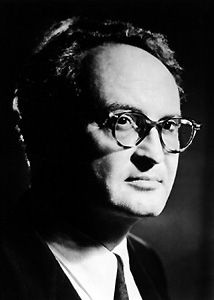
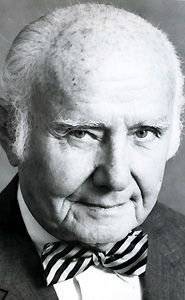
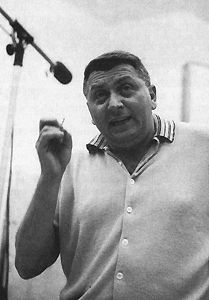
From left to right: Helfman, Secunda, Scharf
Source: Naxos "Milken Archive" CD (my rip!)
Format:mp3, 320k/s (CBR), DDD Stereo
File Size: 152 MB (incl.booklet)
Download Link (re-up by Herr Salat) – https://mega.co.nz/#!xJ9UHLLB!M6KYM0-4yuG3v1YZIMSksXfRL4dyMqGI709mHTcpOAU
Enjoy! Don’t share! Buy the original! 🙂
German composer Max Reger was not known for writing program music. Indeed, he much preferred the "theme and variations"
formula that allowed him to indulge in his favorite pastime: composing large, long-winded fugues with a lot of counterpoint. He did
so brilliantly in his Hiller-, Beethoven-, and Mozart-Variations. Also, he kind of "pre-invented" neo-classical music in his
Sinfonietta and Suite in the Olden Style, two further abstract compositions. There’s also a truckload of organ works.
There is one notable, indeed brilliant exception: His four tone poems inspired by paintings by the famous German Romantic/Symbolist
Arnold B???cklin, whose "Isle of the Dead" (seen below) is one of the famous paintings of the world. It inspired many
artists, including Sergei Rachmaninov. The Reger tone poems are beautifully orchestrated examples of lush, German late romanticism.
Also featured here is the three-part Romantic Suite, which is a somewhat lighter affair.
Music Composed by Max Reger
Played by the Radio Symphonie-Orchester Berlin
Conducted by Gerd Albrecht
"Max Reger was an important composer whose artistic worth far surpasses his still generally meager representation
on the concert stages and in recordings. In his teen years, he came under the disparate influences of Bach and
Wagner, and eventually fused a style from these sources, adding his own unique and seemingly ubiquitous counterpoint,
to fashion music that was both ahead of its time and inextricably bound to the past. His mature idiom melded Baroque
structural ingredients with the opulent harmonic palette of the late Romantic period. His organ compositions include
masterworks like the chorale fantasia Ein feste Burg is unser Gott, Fantasia and Fugue in C minor, and Fantasia and
Fugue on B-A-C-H. His huge chamber music output, consisting of nine sonatas for violin and piano and many other
works, is an important body of work.
Reger was born in Brand, Bavaria on March 19, 1873, and grew up in Weiden. He studied organ and violin with his father,
and piano with his mother. At 11, he began studies with organist Adalbert Lindner. In 1888, Reger traveled to Bayreuth
and heard performances of Wagner’s Parsifal and Die Meistersinger. The experience had a lasting effect on him, the
harmonies and sounds of the latter opera profoundly affecting his musical psyche. In 1890, he began studies in
Wiesbaden with Hugo Riemann and soon produced his Violin Sonata No. 1, Op. 1 (1890-1891).
Reger developed a friendship with composers Eugen d’Albert and Feruccio Busoni in the mid-1890s. During this time,
he wrote several compositions for piano, including Lose Bl???tter (1894) and Aus der Jugendzeit (1895). After an
unpleasant experience in the military that affected his physical and mental health, he returned to his parents’ Weiden
home to recuperate. During this period, he produced his Op. 27 chorale fantasia Ein Feste Burg is Unser Gott, and his
Op. 29 Fantasy & Fugue in C minor. Reger also earned a reputation as a brilliant pianist at this time, playing many
concerts of wide-ranging repertoire, including his own works.
In 1902 Reger married Elsa von Bercken. The Sinfonietta in A (1904-1905) set off a most unwelcome stir for the
composer, placing him at odds with the more conservative musical circles in Munich, where he had settled in 1901.
By 1907 Reger had decided that the hostile climate in Munich was not worth enduring any longer, and accepted a
professorship at Leipzig University. His many students there included Szell, von Hoesslin, Joseph Haas, Schoeck,
Kvapil, and Weinberger. His Violin Concerto (1907-1908) and the Symphonic Prologue to a Tragedy (1908) came
during this period.
In 1911, Reger was appointed conductor of the Meiningen Court Orchestra by Duke George II. He continued appearing
as a pianist and always found time to compose. In February, 1914, he suffered a breakdown from troubles in his Meiningen
post and eventually resigned. By September 1914, he had finished Eight Sacred Songs and the Patriotic Overture for
orchestra. In March 1915, the composer and his family settled in Jena, where he completed his Sonata No. 9 for violin
and piano, declaring it his greatest work in the genre, and the first in his so-called "Jena style." Other important works
came during his "Jena" period, including the Op. 131 chamber works for various string instruments (Op. 131a, Op. 131b,
Op. 131c, Op. 131d). His concert schedule took him to Holland in May, 1916, where he died of a heart attack."
All Music
Source: Koch Schwann CD (my rip!)
Format: mp3, 320k/s (CBR), DDD Stereo
File Size: 118 MB
Download Link (re-up) – https://mega.co.nz/#!sAhmCDrR!O0F65mVm6sO7G1_Ic6GcGnowvN1qxo2dxP3k0jf 0oSA
Enjoy! Don’t share! Buy the original! 🙂
Two ballet scores by French late romantic composer and long-term conductor (1910-32) of the famous "Concerts Colonne"
in Prais, Gabriel Piern??? The mise-en-sc???ne in Cydalise et le Chevre-Pied is a charming mishmash of archaic characters
and settings with the overall character of a pastorale: nymphs, fauns, sultans and sultanas disporting themselves in the
gardens of Versailles at some unspecified time. Our hero, Styrax, has a cheeky clarinet motif which proves ingeniously
adaptable according to context, whether lovelorn, active or triumphant. But the further into the ballet you go, the more
wonderful tunes there are sprinkled around. This album features the first suite from that work, as well as the of Ballet de la
Sultane des Indes, the ballet within a ballet. Then there’s the charming Concert Piece for Harp and Orchestra, as well
as the set of variations Divertissements.
Music Composed by Gabriel Piern???
Played by the Orchestre National de l’O.R.T.F.
With Lily LKaskine (harp)
Conducted by Jean Martinon
"Gabriel Piern??? has been called the most complete French musician of the late Romantic/early twentieth century era.
In his own music Piern??? blended a seriousness of purpose (acquired in part through his studies with Cesar Franck) with
a lighter, more popular flavor reminiscent of Jules Massenet (with whom Piern??? also studied); his dedication to the music
of his contemporary French composers earned him a reputation as a conductor of deep integrity.
Piern??? was born in 1863 in the town of Metz. He displayed great musical promise as a child, and by 1871 he had entered
the Paris Conservatoire to study composition with Massenet and organ with Franck (Franck’s organ class, however, often
focusing more on composing than on playing). At age 11 Piern??? earned a medal for his solf???ge skills, and he later went on
to win top prizes in organ, composition, and piano, as well as (in 1882) the coveted Prix de Rome (for the cantata Edith).
In 1890 Piern??? succeeded his teacher, Franck, as organist at St. Clotilde cathedral, a distinct honor for a young man of 27.
In the late 1890s he abandoned his career as an organist and in 1903 made his debut as assistant conductor of the Concerts
Colonne (of which he served as principal conductor from 1910 to 1934, devoting a great deal of rehearsal time to the
preparation of new works). In addition to his activities on the podium, Piern??? served on the administration of the Paris
Conservatoire and composed for the Ballet Russes (three successful ballets produced between 1923 and 1934). In the
years prior to his death in 1937 he was elected to the Acad???mie des Beaux Arts and made a Chevalier of the L???gion d’honneur.
Piern???’s output as a composer, while by no means as vast as some of his Parisian colleagues (one thinks in particular of
Saint-Sa???ns), includes entries in most of the standard genres; in typically French style, he avoided symphonic form in favor
of orchestral poems and character pieces. While Piern???’s large-scale works, such as the 1897 oratorio L’an mil and the
opera Vend???e from the same year, showcase a solid grasp of musical architecture, the smaller chamber works (sonatas
for both violin and cello and a String Quintet, among other pieces), are more indicative of his exceptional facility."
All Music
Source: Erato CD (my rip!)
Format:mp3, 320k/s (CBR), ADD Stereo
File Size: 128 MB
Download Link (re-up) – https://mega.co.nz/#!Spw1XQSL!RsRlkSjMAHmljfYjwHImZgxxnRpMybGXmH2lUsu GFHk
Enjoy! Don’t share! Buy the original! 🙂
Composers don’t exactly have it easy. On top of carving out time to write music, they also devote considerable effort to getting
their works played and heard … not to mention pursuing other activities that pay the bills. Some juggle composing with teaching
or performing; others might take on unrelated jobs that are the actor’s equivalent of waiting tables. But rarely does someone
graduate from Juilliard debating whether to be a composer or a doctor—and decide to do both.
Scott Steidl (M.M. ’81, D.M.A. ’85, composition) is an eye surgeon who also happens to be a Juilliard-trained composer.
His dual careers (not in succession, mind you, but pursued simultaneously) are unusual, but not exactly unpredictable; his father
was a physician and his mother taught music at a college. Growing up in Minneapolis, Steidl studied several instruments, was
interested in jazz, played in both a rock band and an orchestra—“a generic, eclectic background encompassing all the influences
a lot of American composers describe,” he notes. Intending to focus on pre-med studies at Brown University, Steidl actually
earned two degrees, one in biochemistry and one in music, through a five-year curriculum.
The works on this album exploit the sonic possibilities of the symphonic aggregate to the fullest. Often, as in the title work,
Fire Dreams, the music is agitated, even tumultuous. But there are lyrical and haunting passages as well. Obviously,
Dr. Steidl knows his craft, as all of the works here are splendily made and orchestrated. Whether all of the ideas in the music
justify such an effort is for you to decide, but I think film music lovers, as much as fans of "post-modern" orchestral music
that is advanced but approachable, will find much to enjoy here.
Music Composed by Scott Steidl
Played by the New Zealand Symphony Orchestra
Conducted by James Sedares
"Born in LaGrange, Illinois, Scott Steidl grew up in Minneapolis. There he studied piano, bassoon, and saxophone and developed
an interest in playing jazz. Later as an undergraduate at Brown University, he studied composition with Ron Nelson and continued
his activities in the field of jazz as director of the Brown University Stage Band. After graduating from Brown, Steidl studied
composition with David Diamond and Elliott Carter at the Juilliard School, earning his Masters and Doctoral degrees in composition.
He then completed his education by pursuing his other major interest: medicine. He also holds a doctoral degree in medicine from
the Mount Sinai School of Medicine and specialty training at Harvard Medical School. His music is rooted in the vernacular of our
time and represents the varied influences and rich imagination of the current American culture. His work strikes a balance among
contrasting influences. A lover of popular music, jazz, music theater and western classical music, his musical point of view is
inclusive rather than exclusive. In a concise description of Scott Steidl’s music in The New York Times, John Rockwell
characterized his work as "All-American."
Source: Albany Records CD (my rip!)
Format: mp3, 320k/s (CBR), DDD Stereo
File Size: 134 MB (incl. liner notes)
Download Link (re-up) – https://mega.co.nz/#!JVQEDYRC!NX2TZl2qqrMWOmu5fyxx5Q0rbv9VnkYcW2PtqT5 K5T4
Enjoy! Don’t share! Buy the original! 🙂
What a great way to begin the week!
Thanks a lot, wimpel!
Ricardo Castillo was born in Quetzaltenango on 1st October, 1891 and died in Guatemala City on 25th May, 1966. His childhood
interest in music persuaded his mother, fulfilling one of his father’s great wishes, to send him to Paris to study the subject.
From 1906 to 1922 he lived in Europe, studying violin with A. Lefort and harmony with Paul Vidal. Gradually, he focused on
composition, abandoning his violin studies. During his stay in Paris he composed his first piano works, published in that city and
in 1918 married Georgette Contoux Quant???, a French pianist who had obtained the Prize for Excellence as a pupil of Alfred Cortot
at the Conservatoire. Castillo never showed special interest in opera, the Lied or choral music and for this reason his personality
reflects the autochotonous musical culture of Guatemala rather than the use of limited melodic contours or rhythmical formulae
of folklore music. Musical culture in the pre-Columbian civilization in this region was merely instrumental; expression through
the human voice was not as appreciated or developed as in other civilizations.
The music for the Pa???l Kab??? ballet is Ricardo Castillo’s most complete and elaborate work. Its composition took so long that
it makes one reflect on the fact that Pa???l Kab??? took up a long period of the composer’s creative activity, owing to the fact that
we can foretell this ballet elaboration from his works in 1940. Pa???l Kab???’s subject is based on a Mayan legend which tells of the
sacrifice of a young maiden in honour of the young God of Corn so that there would be many fruitful crops.
La Doncella Ixquic, a symphonic poem of 1944, is one of Castillo’s outstanding works. Apparently he had two huge projects
which were only partially carried out. The first one, to write a series of cycles for different instrumental combinations entitled
Guatemala, and the second, a series of works illustrating passages or situations described in the Popol Vuh, the cosmological
book of the Maya-Quich??? people.
Castillo composed his symphonic fantasy Estelas de Tikal in 1945. In this composition, Castillo uses different themes which
come from Mam and Quich??? folklore and were written down by his brother Jes???s, with added themes of his own invention. Although
this score was conceived for concert, it has also served as the bases for diverse choreographic versions, especially one
devised by Colonel de Basil.
The music for Carlos Gir???n Cerna’s drama, Quiche Acid, was composed by Ricardo Castillo in 1947. This is his third piece of
incidental music for the theatre, following Gir???n Cerna’s Doncella Ixquic and before Miguel Angel Asturias’s Culculc???n. Just days
before his death, the composer destroyed these three compositions. However, a copy of Quich??? Acid was already part of the
Fleischer Collection and this was the basis upon which I reconstructed the score.
Castillo’s Sinfonieta para Orquesta is with the Suite in D for piano and a Duo for violin and piano in homage to Ravel,
the centre of a group of works of his neoclassic style. The Sinfonieta has three movements, a concise work in its dimensions
and orchestration, where the first four notes of the initial theme are used as a unifying element in the whole work, in which
neoclassicism relates mainly, to Mozart’s style in his final works.
Xibalba, a symphonic poem of 1944, is one of Castillo’s best works. Apparently he had two great projects which
were on I y partially carried out. The first one, to write a series of cycles for different instrumental combinations entitled
Guatemala, and the second, a series of works illustrating passages or situations described in the Popol Vuh, the cosmological
book of the Maya- Quiche people.
Xibalba and La Doncella Ixquic are the result of his second project. These two works can have the same brief introduction
"Once upon a time…" thus creating an environment of legend, of myth. The stories of Xibalba and the Doncella Ixquic are intimately
related. Xibalba is a world lower than the ones of the Quiches, the dark place governed by Bolontiku, the Nine Masters of the Night, each
of them governing at a different level and responsible for death and disease in mankind. Xibalba is the night ambit for the sun. The legends
of Popol Vuh refer to the encounters between the masters and heroes of the superior world with the ones of Xibalba. Those clashes
are antagonistic, described as a descent to hell.
Manuel Mart???nez-Sobral was born in Guatemala City on 11th May, 1879 and died on 23rd March, 1946. Not much is known about
how he grew into music. As a composer, Martinez-Sobral was a self-made musician, forced to learn French and Italian to be able to
study books then used on musical techniques by Dubois and Cherubini. He composed all his music between 1895 and 1920, and after
that period he worked as a lawyer. He was the Dean of the Law School and held other important public positions, and on I travelled
abroad twice, to Philadelphia in 1933 and to New York in 1934.
Acuarelas Chapinas, Four Symphonic Scenes, was Manuel Martinez-Sobral’s masterpiece. Its personal symphonic style is evident
because of its dimensions and grandiose orchestration, suggesting that its title should be Frescos instead of the diluted one of Acuarelas
(water-colours)… Through its four movements Acuarelas Chapinas attempts to evoke and perpetuate the way in which a Sunday passed
in Guatemala City at the turn of the century, the archetype of every Sunday in that period. Acuarelas Chapinas is structured as a
symphony. Each movement corresponds to a definite musical character, related to a place in the city and, therefore, to a scene of
Sunday life; each scene also corresponds to a determined time of the day thus a determined colour is assigned to each hour.
The suggestive and visual title chosen by the composer must undoubtedly have its origin in these characteristics.
from the liner notes
Music Composed by Ricardo Castillo & Manuel Martinez-Sobral
Played by the Moscow Symphony Orchestra
Conducted by Antonio de Almeida
"This is all attractive music…it is also bound to please anyone looking for new music in the romantic vein…very classy and
international in its appeal. Beautiful recording."
American Record Guide
Source: Marco Polo CDs (my rips!)
Format: mp3, 320k/s (CBR), DDD Stereo
File Sizes: 162 MB / 154 MB (incl. covers, liner notes)
Castillo: Pa???l Kaab???, etc (re-up) – https://mega.co.nz/#!UZoRwBoY!Al1nuFxhL_WoI9fdZMH3BTwQkNc3qWxr3yFifwl q7-w
Castillo, Martinez-Sobral: Sinfonietta, etc (re-up) – https://mega.co.nz/#!JEojUJoK!Re1gPEfhoZfiJdKv4a2NvR7HyNVnlBUGr2Xok_-o0RQ
Enjoy! Don’t share! Buy the originals! 🙂
William Grant Still was one of the first internationally recognized African-American composers; he was also the
first of his race to conduct a major American symphony orchestra, and the first to conducted an orchestra
of the American South. His compositions are a bit like a more polished version of Gershwin, with folk heritage
plus a dash of Brahms thrown in. Without a doubt, it was his Symphony No.1 ("African-American") that made the biggest
splash, but he composed more than 150 works in toital.
Presented here are his ballet La Guiablesse, as well as his colorful Danzas de Panama,
and a selection of short orchestral vignettes and folk-inspired chamber works.
Music Composed by William Grant Still
Played by the Berlin Symphony Orchestra
With Alexa Still (flute)
Conducted by Isaiah Jackson
"Still spent a year in the Navy in 1918, and further musical studies at Oberlin College stimulated his interest in the classics
once again. In 1919 he was drawn to New York by a steady job as a staff arranger for Handy’s Pace and Handy publishing
firm. He found plenty of work writing arrangements for theater orchestras and performing—he was part of the original orchestra
for the all-black musical hit Shuffle Along and worked as musical director for the Black Swan record label. But Still continued
to seek out teachers who could challenge him in the classical field. He took composition lessons from the American nationalist
composer George Chadwick when Shuffle Along went on tour to Boston in 1922, and from 1923 to 1925 he studied with
the highly experimental French-born composer Edgard V???rese in New York.
Along with these varied influences, Still was very much aware of the ideas of Harlem Renaissance thinkers who had
begun to investigate the links between African and African-American culture. Now Still had the musical tools to fuse
all these influences into major classical works. Var???se’s International Composers’ Guild provided Still the opportunity to have
some of his works performed in the 1920s, and in 1931 the Rochester Symphony Orchestra performed Still’s Afro-American
Symphony —the first performance by a major orchestra of a symphony composed by a black American. The work remains
Still’s best known; it featured a mosaic of African-American motifs that included not only spirituals but also blues, jazz,
and call-and-response elements. It was also the first symphony to use the banjo as part of the orchestra.
According to the Duke University Library website, “Still’s Afro-American Symphony was, until 1950, the most popular of any
symphony composed by an American.” It touched off a period of sustained success for Still; works such as his orchestral
suite The Deserted Plantation found performances at major venues (the Paul Whiteman Orchestra performed that work at
the Metropolitan Opera House). His ballets La guiablesse (1927) and Sahdji (1929, with a story by Harlem Renaissance writer
Alain Locke) were danced by both black and white artists. Nor did Still abandon popular forms; he wrote the score for the
Bing Crosby film Pennies from Heaven after moving to California in 1935.
Supported by a Guggenheim Fellowship and other prestigious awards, Still was able to spend more and more time composing.
In 1939 he remarried; his second wife, Verna Arvey (who later wrote a biography of Still), was a Jewish concert pianist, and
he wrote the piano collection Seven Traceries and other piano music as a result. Several of Still’s works of the 1940s were
rooted in serious events of the day and gained wide renown; his 1940 choral cantata with narrator, And They Lynched Him
on a Tree, evoked the violence directed at the Southern black population, and the orchestral In Memoriam: The Colored
Soldiers Who Died for Democracy (1943) was one of several World War II-themed works he composed.
Still’s most ambitious undertaking of the 1940s was the production of his opera Troubled Island, with a libretto by Langston Hughes.
Still worked on the opera for several years, and its premiere at the New York City Opera on March 31, 1949, marked the first time an
opera composed by an African American had been performed in a major house. In the 1950s and 1960s Still’s music fell out of favor
as academic musicians prescribed the adoption of strict modernist styles. Although Still’s music was considered too crowdpleasing by
some critics, Philadelphia Orchestra conductor Leopold Stokowski called him one of America’s greatest composers.
Still wrote mostly instructional music and music for children in the later stages of his career, expressing the hope that he might thereby
foster intercultural understanding. He died of a stroke in Los Angeles on December 3, 1978. A reawakening of interest in his music was
signaled by a Public Broadcasting Service telecast of his opera Bayou Legend in 1981 (another first for a black composer). In 1987
National Review critic Ralph de Toledano wrote that “in his great outpouring of music—some two hundred compositions in every category—
Still expressed the sweep and melody of this country, the pounding heart of jazz, the surging human protest of the blues, and the
attenuated sensibility of popular song.” By the end of the twentieth century, new recordings and performances of Still’s compositions
were bringing his music to light once again."
Encyclopia.com
Source: Koch International CD (my rip!)
Format: mp3, 320k/s (CBR), DDD Stereo
File Size: 83 MB
Download Link (re-up) https://mega.co.nz/#!9Ax1gLQB!W4enM0nXP7fxc4Q8U_dzmBFXFghNUwI23qQycRY ndx0
Enjoy! Don’t share! Buy the original! 🙂
Anton???n Dvor???k was a latecomer to composing symphonic poems, but when he finally did, at the end of his great career,
the results turned out to be his finest works, and it’s a pity that the tone poems after Karel Jaromir Erben have been eclipsed
in popularity by the inferior New World Symphony. In the five final tone poems (the four best of which are featured here), Dvor???k
moved ever closer to writing something in an early 20th century idiom, and there are moments in these pieces that are eerily
reminiscent of the music of Leos Jan???cek, who would take the torch from Dvor???k to become the greatest Czech composer of his time.
The Water Goblin, The Noon Witch, The Golden Spinning Wheel and The Wild Dove are superlative examples of this
genre, presented here in authoritative performances under Sir Charles Mackerras.
Music Composed by Anton???n Dvor???k
Played by the Czech Philharmonic Orchestra
Conducted by Sir Charles Mackerras
"Just about every Czech conductor has recorded Dvor???k’s four symphonic poems based on the poetry of Karel Erben,
though not every recording is equally successful. At the successful end of spectrum are Vaclav Talich’s dramatic 1951
recordings and Rafael Kubelik’s lyrical 1975 recordings. At the other end are Zdenek Chalabala’s dreary 1961 recordings
and V???clav Neumann’s dull 1977 recordings. To challenge the Czechs’ hegemony, we now have Charles Mackerras’ 2010
accounts, which come very close to taking Talich’s place as the finest performances of these works ever recorded.
Mackerras is the American-born conductor who studied in Prague after the war and whose grasp of Czech music is as
sure as the finest Czech conductors. With the Czech Philharmonic Orchestra’s warm, singing tone and effortless
irtuosity at his disposal, Mackerras turns in readings as dramatic as Talich’s, as lyrical as Kubelik’s, and as colorful as
one could hope. Recorded in lushly detailed digital sound by Supraphon, these performances should by all means be
heard by anyone who enjoys Dvor???k and these works in particular."
All Music
Source: Supraphon CD (my rip!)
Format: mp3,320k/s (CBR), DDD Stereo
File Size: 182 MB (incl. cover, booklet)
Download Link (re-up) – https://mega.co.nz/#!DsISnCKT!bKHuBG5VFFhBwrFmDJ1fxmHE9IUPKgYfVqDufzu epHA
Enjoy! Don’t share! Buy the original! 🙂
How better to say "Roaring 20s" than with a ballet about frivolous rich people having a party.
This is what noted French neo-classicist Francis Poulenc does in Les Biches, one of his most
popular works apart from the concertos and La Vox Humaine. Most often heard in the form of a suite,
it is featured here in its complete version, and cunningly coupled with two other 20s classics we have already
encountered in this thread: Darius Milhaud’s ballet Le Boeuf sur le Toit, and Arthur Honegger’s
paean to heavy machinery, Pacific 231.
Music by Francis Poulenc, Darius Milhaud & Arthur Honegger
Played by the Orchestre de Paris
Conducted by Semyon Bychkov
"Les biches is a ballet by Francis Poulenc, premiered by the Ballets Russes in 1924. The composer, who was
at the time relatively unknown, was asked by Serge Diaghilev to write a piece based on Glazunov’s Les Sylphides,
written seventeen years earlier. Poulenc, however, chose to base his work on the paintings of Watteau that depicted
Louis XV and various women in his "Parc aux biches"; the word biche usually translated as hind, or a female deer.
Poulenc described his work as a "contemporary drawing room party suffused with an atmosphere of wantonness,
which you sense if you are corrupted, but of which an innocent-minded girl would not be conscious." Diaghilev
recognized the great potential of the ballet and produced it for the 1924 Ballet Russes season, bringing Poulenc
into the forefront of French music. Les biches was well received by critics, with Henri Malherbe of Time calling it
"very attaching and original". Poulenc continually revised the music up through the 1940s, eventually reducing it
to an orchestral suite in five movements.
The ballet, written in a light and frothy style, is in turns reminiscent of Mozart, Scarlatti, Franck, Tchaikovsky,
and Stravinsky, mirroring the style of Saint-Sa???ns’s private composition The Carnival of the Animals. Les biches,
alongside the pit orchestra, uses a hidden chorus, found before in Ravel’s Daphnis et Chlo???. The work was
choreographed by the famous Bronislava Nijinska and its set and costumes designed by Marie Laurencin. It was
reset for New York City Ballet’s Jazz Concert by Francisco Moncion, the other three dances being Todd Bolender’s
Creation of the World, John Taras’ Ebony Concerto and George Balanchine’s Ragtime (I); the City Ballet
premiere took place on December 7, 1960, at City Center of Music and Drama."
Wikipedia
Source: Philips CD (my rip!)
Format: mp3, 320k/s (CBR), DDD Stereo
File Size: 138 MB
Download Link (re-up) – https://mega.co.nz/#!pV4iXSiQ!QgmBuFzUZpe49u8c_wXS7RpJ-PxMWNd00Cav7tANcVk
Enjoy! Don’t share! Buy the original! 🙂
Herbert Hamilton Harty was one of the finest British conductors of his time, and the long time music director of
the then-famous Hall??? Orchestra. Commentators described him as "the English Toscanini". He was also a capable composer,
albeit, due to his other responsibilities, with a relatively small body of works. Apart from An Irish Symphony and a Violin Concerto,
he wrote a few symphonic poems, like the 30-minute The Children of Lir featured on this album. Inspired by an Irish
fairy tale about the four children of King Lir, who had a spell cast on them that turned them into white swans doomed to
wander over the Irish waters for a thousand years, the tone poem is neo romantic, with some impressionistic passages.
It is wonderfully descriptive music, very evocative of the Antrim coast the composer visited before he started work on
the music. Also included is a lovely setting of John Keats’ Ode to a Nightingale for soprano and orchestra.
Music Composed by Hamilton Harty
Played by the Ulster Orchestra
With Heather Harper (soprano)
Conducted by Bryden Thomson
"The Children of Lir is an Irish legend. The original Irish title is Clann Lir or Leanna??? Lir, but Lir is the genitive case of Lear.
Lir is more often used as the name of the character in English. The legend is part of the Irish Mythological Cycle,
which consists of numerous prose tales and poems found in medieval manuscripts.
Bodb Derg was elected king of the Tuatha D??? Danann, much to the annoyance of Lir. In order to appease Lir, Bodb gave
one of his daughters, Aoibh, to him in marriage. Aoibh bore Lir four children: one girl, Fionnuala, and three sons, Aodh and
twins, Fiachra and Conn. Aoibh died, and her children missed her terribly. Wanting to keep Lir happy, Bodb sent another
of his daughters, Aoife, to marry Lir.
Jealous of the children’s love for each other and for their father, Aoife plotted to get rid of the children. On a journey with
the children to Bodb’s house, she ordered her servant to kill them, but the servant refused. In anger, she tried to kill them
herself, but did not have the courage. Instead, she used her magic to turn the children into swans. When Bodb heard of
this, he transformed Aoife into an air demon for eternity.
As swans, the children had to spend 300 years on Lough Derravaragh (a lake near their father’s castle), 300 years in the
Sea of Moyle, and 300 years on the waters of Irrus Domnann Erris near to Inishglora Island (Inis Gluaire). To end the spell,
they would have to be blessed by a monk. While the children were swans, Saint Patrick converted Ireland to Christianity.
After the children, as swans, spent their long periods in each region, they received sanctuary from MacCaomhog (or Mochua),
a monk in Inis Gluaire.
Each child was tied to the other with silver chains to ensure that they would stay together forever. However Deoch, the
wife of the King of Leinster and daughter of the King of Munster, wanted the swans for her own, so she ordered her husband
Lairgean to attack the monastery and seize the swans. In this attack, the silver chains were broken and the swans
transformed into old, withered people."
Source: Chandos CD (my rip!)
Format: mp3, 320k/s (CBR), DDD Stereo
File Size: 118 MB (incl. cover, booklet)
Download Link (re-up) – https://mega.co.nz/#!0dhXBRga!c32EVT_sNotCsecUs0VXqV4WLXQ86S1ub7GjafH ooxc
Enjoy! Don’t share! Buy the original! 🙂
Chan Pui-Fang (Mandarin: Chen Pei-Xun) is a Chinese composer who was first educated in London, then in Hong Kong.
For a several decades he taught composition at the Beijing Central Music Conservatory, beginning in 1949, the year
that the People’s Republic of China was founded. Like many of his colleagues at that time, he wrote some patriotic
music that glorified the struggles for the "new China", like the Symphony No.1, "My Motherland". He also wrote several
symphonic poems, of which Happy Moonlit River in Spring and Wavy Emotions (aka Yellow Crane Mansion).
In later years, his Symphony No.2 "Tsing Ming’s Monument" (Mandarin: Qingming ji, "the Qingming Victims")
was meant as a tribute to the victims of Mao’s Cultural Revoluton.
Also featured is are the symphonic poem The Cowherd Er-Xiao by Qin Yong-Ching, which deals with the efforts of
said crafty young cowherd who outfoxes the invading Japanese army, and the more monumental, forceful "nature poem"
Sketch of the Changjiang Gorges by Wang Yi-Ping.
Music Composed by Chan Pui-Fang (Chen Pei-Xun)
Played by the Russian Philharmonic Orchestra
Conducted by Mak Ka-Lok
Music by Chan Pui-Fang (Chen Pei-Xun), Qin Yong-Ching & Wang Yi-Ping
Played by The Central Philharmonic Orchestra of China
Conducted by Hu Bing-Xu
"Loushan Pass" by Mao Zedong
"Fierce the west wind,
Wild geese cry under the frosty morning moon.
Under the frosty morning moon
Horses’ hooves clattering,
Bugles sobbing low.
Idle boast the strong pass is a wall of iron,
With firm strides we are crossing its summit.
We are crossing its summit,
The rolling hills sea-blue,
The dying sun blood-red."
Source: Hugo CDs (my rips!)
Format: mp3, 320k/s (CBR), DDD Stereo
File Sizes: 158 MB / 131 MB
Chan Pui-Fang: Symphonies (re-up) – https://mega.co.nz/#!ZVZwzYoa!BYuld3suEsJ-V7DMUJy74S7v-WoMthYBaVKn7RZL19c [/url]
Chan Pui-Fang: Happy Moonlit River, etc. (re-up) – https://mega.co.nz/#!8MonXQLY!LCr50iBotYcXK7w–ES6rEzk7KR72KR2JNtanunOL3g
Enjoy! Don’t share! Buy the originals! 🙂
L???szl??? Lajtha was a leading 20th century Hungarian composer whose international reputation suffered as
a consequence of the Cold War and his inability to travel and promote his music abroad. He wrote nine
symphonies (all of them recorded by the forces featured on this album), three ballets, and ten string quartets.
Featured here is an extended suite from the ballet Capriccio, which is very colorful and entertaining, and if
you like Kod???ly and R???zsa, you should be able to enjoy this is a lot.
Music Composed by L???szl??? Lajtha
Played by the P???cs Symphony Orchestra
Conducted by Nicol???s Pasquet
"The one-act ballet Capriccio was written in 1944. Lajtha worked here on a cheerful, light and brilliant piece of
music at one of the darkest periods of modern Hungarian history. Contrasts of this kind between the internal and
external worlds are characteristic of the composer, for whom composition was an escape from harsh reality. His
orchestral Mass, Missa in diebus tribulationis, Opus 50, for example, was written in 1950, the year in which the
Hungarian church was under strong attack, with the suppression of the monasteries. The same period, between 1948
and 1950, saw the birth of his ingenious opera buffa, The Blue Hat, Opus 51, (Le chapeau bleu). While working on the
orchestration of this composition, he w rote in a note to one of his sons: "Just as in the town l have a room that is
mine and only mine, so I have in my soul a secret room of my own. It has nothing to do with reality, yet it is more
real". One of the closest associates of the composer, Margit Toth, revealed that while composing Capriccio, Lajtha
"often refused to stop working when an air-raid was sounded, because he was working on apart that gave particular
delight’. The original work is for four hands and was later orchestrated by the composer. (Tibor Devai adapted Capriccio
for two pianos.)
Lajtha had a peculiarly strong affinity with the period around 1700 and Capriccio, like The Blue Hat, is set in that time.
"The costumes and the architectural style recall the age of Watteau", he wrote on the first page of the scenario. In
an interview with the publication Film, Theatre, Music in 1962 he remarked: "I like stage subjects evoking the 1700s;
I like those years of the theatre, when actors were stock characters, and it intrigues me how a man of today can move
these figures from another age". As for Capriccio he said: "Today’s ballet genre, for me, is a comedy on a workable plot.
It is easier to dance farcical situations". Capriccio, more than any other work by Lajtha, shows a clear relationship with
the commedia dell’arte, with popular Italian theatre of the seventeenth and eighteenth centuries. This is already clear f
rom the names of the dramatis personae, Arlequin, Colombine, Pantalon, the Captain and so on, but the story itself is
also typical. It is not too far-fetched to describe Capriccio as a twentieth century commedia dell’arte. There is here too
a close kinship between the comic opera The Blue Hat, with a libretto by Salvador de Madariaga, and the ballet, both
of them inspired by the same artistic intention. It is possible, moreover, that Lajtha only had a commedia dell’arte stage-
work in mind, with action taking place around the year 1700, with the actual genre only appearing later, leading first to a
ballet and then to an opera. Lajtha’s posthumous papers suggest that the libretto is based on an idea by the French
writer Francois Gachot, while the meagre literature on Lajtha alleges that Kalman Csatho was his co-author.
The setting is a clearing in a large park. To the left there is a mill ???for honest labour??? and to the right the drive-way to the castle.
1. Ouverture. (Presto molto) The director of the puppet-theatre, as an exception not wearing costume of the Watteau period,
but tails and top-hat, arranges and winds up the puppets. These include Arlequin, Colombine, the Captain, Isabelle,
the Baroness, Pantalon, the Ballerina and Mezzetin, as well as servants, butlers, orderly and peasants.
2. Complainte et Arlkequin consolateur (Complaint and Arlequin as Consoler). (Andantino) Colombine is distressed, for
the mill rented by her husband Arlequin and her has broken down. Arlequin, back from the war, repairs the mill.
3. Marche goguenarde (Mocking March). The Baroness has decided to sell her mill to Pantalon, who wants to convert
it into a bar for his girl-friend, the Ballerina. Arlequin twice chases away the servants who want to put up the new trade-sign.
4. Isabelle. (Molto con moto) Isabelle, the niece of the Baroness, plays about with the letter that announces the sale of the mill,
ignorant of its contents. She joins Arlequin and Colombine in begging the Baroness not to sell the mill, but in vain. The contract is
signed. Arlequin and Colombine walk sadly away. The Baroness waits excitedly for the Captain, whom she has chosen as a
husband for Isabelle.
5. La marche du Capitaine (The Captain’s March). The Captain presents the Baroness with a bunch of white roses and wants
to give Isabelle a bouquet of red roses, but she declines it. Pantalon introduces to the Ballerina the Captain, who takes a liking to her.
6. Serenade de Mezzetin. (Allegretto) The poet Mezzetin serenades Isabelle, then they dance together.
7. Menuette et Musette. Le le9on d’amour, the lesson in love. The Ballerina stealthily watches Mezzetin and Isabelle first chasing
each other and then embracing. She runs off to the castle and tells on them to the Captain.
8. Toccata. (Presto) The Captain challenges Mezzetin to a duel. The former "fights" with a toy sword, the latter with his guitar,
then a stick. The Ballerina calls the Baroness, Pantalon and the servants, while Isabelle runs for Arlequin and Colombine. When
the belligerents are separated, the Ballerina dances an alluring dance to the Captain and the four drink until they are intoxicated.
Mezzetin’s friends help him, in the meanwhile, to steal away.
9. Rondeau etcouplet. (Allegro) The Captain, the Ballerina, Pantalon and the Baroness dance in pairs or all four together, pas de
deux and pas de quatre alternating, then they fall asleep drunk on a stone bench.
10. Romance. (Andantino) Isabelle and Mezzetin dance, later joined by Arlequin and Colombine.
11. Scherzo. (Vivace) Seeing the drunken company, Arlequin racks his brains to find a way of recovering the mill and righting matters
for the lovers. At last they turn to the Director for help and he dresses Arlequin up as the Emperor of the Moon, with the others
as his retinue.
12. Marche plus gracieuse pour un empereur de la lune (A Rather Graceful March in Honour of the Emperor of the Moon). The Emperor
of the Moon and his suite appear. The Emperor offers "treasures" (illuminated inflated plastic bags) for the castle to the Baroness
and for the mill to Pantalon. An agreement is concluded, and the Emperor gives presents to everyone, before leaving with his attendants.
13. Les regrets (Regret). (Andantino) The Ballerina is the first to open her bag of "treasure"; the light dies out, it is empty .
Everyone loses heart.
14. Finale. (Vivace) Arlequin, now dressed as himself, brings matters to rights. The Baroness gives Isabelle and Mezzetin her blessing
and the castle. Arlequin and Colombine recover the mill. The Captain consoles himself with the Ballerina, the Baroness with Pantalon.
They dance a round-dance in pairs, but when the curtain goes up again to the applause, the puppets are all still in their places,
and the Director bows."
Source: Marco Polo CD (my rip!)
Format: mp3, 320k/s (CBR), DDD Stereo
File Size: 159 MB
Download Link (re-up) – https://mega.co.nz/#!MAIHgQ6Z!LVaC8i9OpFvTGGkzCSppIgddnA1QMVo-o4oQi1Mry78
Enjoy! Don’t share! Buy the original! 🙂
Two orchestral suites by British composer Frederick Delius. The Florida Suite, subtitled "Tropical
Scenes for Orchestra" was composed in 1887, when Delius was 24, but not heard again until three years after
his death. The music owes something to Grieg, but there are personal memories of a visit to a Florida
plantation involved, too. The North Country Sketches, a later work, decribe the composer’s native
Yorkshire landscape and folk. Here, the style is more typical of his mature impressionism.
Music Composed by Frederick Delius
Played by the Ulster Orchestra
Conducted by Vernon Handley
"Frederick Delius was an English composer who forged a unique version of the Impressionist musical language
of the early twentieth century. He was born in Bradford, England, in 1862, and died in Grez-sur-Loing, France,
in 1934. He did not come from a musical family; rather, his father owned a wool company and hoped that his
son would follow a career in business. Delius, however, wanted to study music, and though his father did not
approve of music as a profession, he did not discourage music-making as a pastime; thus, Delius was allowed to
study the violin and the piano. To his father’s dismay, he also spent much of his youth sneaking away from
school to attend concerts and opera performances. When he completed school, he went to work for his father in
the family business. In 1884, he left England for Florida, where he worked on a plantation as an orange grower.
While in Florida, he began studying music with Thomas Ward, a musician and teacher from Jacksonville. Deliu
s proved to be a failure as an orange grower, and began supporting himself as a musician. In 1886, his father
arranged for him to spend a year and a half studying music in Germany at the Leipzig Conservatory. Though
Delius would later insist that he learned very little of importance during his stay in Leipzig, it was there that he met
Grieg, with whom he forged a lifelong friendship. Grieg convinced Delius’ father to allow the young man to become
a composer, and Delius, with the support of his formerly reluctant father, soon moved to Paris and began
living the life of an artist.
Once in Paris, Delius began composing in earnest, and towards the end of the nineteenth century had already
completed two operas, Irmelin and The Magic Fountain. In the first decade of the twentieth century, Delius married
the painter Jelka Rosen and produced a number of important works, including the opera A Village Romeo and
Juliet, the large-scale choral works Appalachia and A Mass of Life (based on the writings of Nietzsche), a piano
concerto, and a number of songs and chamber pieces. His music was well-received throughout Europe, and Delius
was quite successful up until World War I, when he was forced to leave France for England. Despite his renown
in continental Europe, Delius was virtually unknown in his native England, and his stay there was marred by
financial difficulties. After the war, Delius returned to France, where the syphilis he had contracted in Florida
gradually caused him to become paralyzed and blind. Ironically, as Delius became increasingly infirm, his fame
began to spread. This was due in large part to the efforts of English composer Sir Thomas Beecham, who
championed Delius’ music and organized a Delius Festival in 1929. Though terribly ill, Delius nonetheless still
wanted to compose, and in 1928 enlisted the services of English musician Eric Fenby, to whom he dictated
music (Fenby would later write a book about Delius). Towards the end of his life, Delius was made Companion
of Honor by King George V of England, and was awarded an honorary degree in music by Oxford University.
Before his death, Delius was able to hear his music over the radio and on record, but these accomplishments
paled before the terrible deterioration of his health, and he died in seclusion."
All Music
Source: Chandos CD (my rip!)
Format: mp3, 320k/s (CBR), DDD Stereo
File Size: 160 MB (incl. cover, booklet)
Download Link (re-up) – https://mega.co.nz/#!5ZAH0LrB!BoMUnjRrvjsPbN8pC8d4ExZ46JRTnTKMU8iz3Dn mvV0
Enjoy! Don’t share! Buy the original! 🙂
———- Post added at 09:33 AM ———- Previous post was at 08:46 AM ———-
No.131
Jacques Ibert was an important pre-WWII French composer who dabbled in every conceivable genre, including film music
(I upped his score for Orson Welles’ Macbeth a while ago), and in different styles. So while the highly evocative triptych
of symphonic poems entitled Escales (Ports of Call) is resplendently impressionistic, even pointillistic, the brash, joyous
suite Paris embraces jazz and popular music influences, while the wonderful Flute Concerto is a characteristically neo-classical piece.
Also included are a boisterous Bacchanale, and two works commissioned by American orchestras, Bostoniana and the
Louisville Concert. Performances here are excellent.
Music Composed by Jacques Ibert
Played by the Orchestre Symphonique de Montr???al
With Timothy Hutchins (flute)
Conducted by Charles Dutoit
"Only three works here are currently in the catalogue, namely Escales, the Flute Concerto and Paris, and
this enterprising disc deserves a warm welcome. A Prix de Rome winner, Ibert has never had his due as a
serious composer, even in France, although there at least he was much in demand for stage and film scores.
This is a pity, for his music is superbly crafted and of a life affirming quality rare in our century, even
more positive (though no less witty) than that of Poulenc.
Each of these pieces is stylish and finely scored; furthermore, Charles Dutoit and his superb Montreal orchestra
perform with skill and panache (as does Timothy Hutchins in the Concerto), while the recording, made in their
favourite location of St Eustache’s Church, is all that one could ask, encompassing every delicate texture or exciting
burst of sound. Thus Escales (1922) has rarely sounded so deliciously Mediterranean and North African. But the
real treasure here is the unfamiliar music, which takes us up to the composer’s unfinished Second Symphony 40
years later, written for the Boston Symphony and existing only as a single movement, posthumously entitled
Bostoniana. As its names suggests, the Louisville Concerto (1953) was also written for an American orchestra,
but Paris (1932) is a six-movement symphonic suite that the composer made from his music to a play by Jules
Romains with the curious name of Donogoo-Tonka. Finally, Hommage a Mozart (not a pastiche) was commissioned
as a tribute for the bicentenary of Mozart’s birth. What more need I say? Recommended to all save gloom merchants."
Gramophone
Source: Decca CD (my rip!)
Format: mp3, 320k/s (CBR), DDD Stereo
File Size: 181 MB
Download Link (re-up) – https://mega.co.nz/#!NRxBlIxQ!SmHW5x-rts2hAUq3wz1ULyFE8kxrGFc_8WRpVcvoH6c
Enjoy! Don’t share! Buy the original! 🙂
Louis Aubert (1887-1968) belongs to a group of neglected French composers that inlcudes Florent Schmitt and
Charles Koechlin. Like the latter, Aubert was a great fan of motion pictures and composed a major work to
express that love (Koechlin’s was The Seven Stars Symphony). The suite Cin???ma was extracted from
a ballet that illustrated key scenes of film history in dance. There are movements on Charlie Chaplin, Douglas
Fairbanks Sr., Mary Pickoford, Walt Disney(!) and Rudolph Valentino, so the emphasis is on silent films despite
the ballets’s 1956 composition date. The 1924 symphonic poem Dryade is typical of its era – a depiction
of paganism in the wake of Stravinsky’s Le Sacre. In contrast, the suite Feuille d’Images (Album Pictures)
offers a deft selection of childhood fantasies. Tombeau de Chateaubriand and Offrande are both commemorative
works, one for the centenary of a writer’s death, the other an homage to the victims of World War II. Chateaubriand
was a great writer of sea-related literature, so the music offers, among other nature descriptions, a wonderful
musical seascape right at the beginning.
Music Composed by Louis Aubert
Played by the Staatsphilharmonie Rheinland-Pfalz
Conducted by Leif Segerstam
"Louis Aubert was a child prodigy. His parents, recognizing their son’s musical talent, sent him to Paris to receive an
education at an early age. He became recognized for his voice, primarily for his renditions of the Pie Jesu from Gabriel
Faur???’s Requiem at the ???glise de la Madeleine. The young Aubert met Faur??? at the Paris Conservatoire, and he regularly
attended at his composition classes, which greatly influenced his development.
Aubert became an excellent pianist. In 1911 he premiered Maurice Ravel’s Valses nobles et sentimentales, which were written
for and dedicated to him. He also worked as a piano and composition teacher, both privately and on the faculty of the
Conservatoire de Paris. He counts among his students Henry Barraud, Jean-Marie Beaudet, Jean Berger, and Georges Savaria.
He composed music for the church, several ballets, m???lodies, and incidental music for the stage. Although Breton by
birth at a time of intense Breton nationalism, he was little inspired by his home region. Aubert wrote popular songs,
notably for Marie Dubas. He also was a contributing journalist to the magazines Chantecler, Paris-soir, Le journal and Op???ra.
Aubert wrote one opera in three acts based on classic fairy tales by Charles Perrault to a libretto by J. Chenevi???re entitled
La f???ret bleu ("The Blue Forest"). The work was composed in 1904 to 1911 and individual acts were performed while the
work was in progress. The first complete staged performance appeared in Geneva on 7 January 1913. The enchanting
characters and delightful plot enabled the work to achieve popular success in other theaters, including Boston. The work
did not appear in Paris until 1924, where it was staged at the Op???ra-Comique (Salle Favart).
Aubert died in near-oblivion in Paris at age 90."
Wikipedia
Source: Marco Polo CD (my rip!)
Format: mp3, 320k/s (CBR), DDD Stereo
File Size: 144 MB (incl. cover, booklet)
Download Link (re-up) – https://mega.co.nz/#!tB5XTR4A!LDJKfm_uj3XRT8wD_e3B9RnP-WNH4-c79hhZIJxs65I
Enjoy! Don’t share! Buy the original! 🙂
Eclectic as a musician, Laurent Petitgirard combines a career as a composer of symphonic and film music with that
of a conductor, appearing internationally with orchestras. He served as Music Director of the Orchestre Symphonique
Fran???ais from 1989 to 1996 and was appointed Music Director of the Orchestre Colonne in 2004.
If The Twelve Guards of the Temple (2004) were to have a subtitle, it would be ‘Journey of Initiation for Full
Symphony Orchestra’, twelve guards and twelve notes, but no specific system, because there is nothing in this
temple to prove that it is not one of tonality. There is no plan, simply a journey. The work uses five ancient Tibetan
cymbals, instruments so dear to Claude Debussy, as if this temple had dreamt of sheltering a faun.
Poem, for large string orchestra, was composed in 2002 and had its first performance with the French
National Orchestra conducted by the composer. This one-movement piece must be considered as an ellipse,
giving the feeling that time passes. This corresponds to a desire for fluidity, after the darkness of the opera
Joseph Merrick, called the Elephant Man. Euphonia is based on a fantastic tale by Hector
Berlioz describing a futuristic musical city ‘Euphonia’ in which a jealous composer sets a musical trap to
destroy the woman who spurned him and her lovers.
Music Composed and Conducted by Laurent Petitgirard
Played by the Orchestre National Bordeaux Aquitaine
& the Ljubljana Radio Symphony Orchestra
Euphonia Synopsis
"Xilef, a young composer living in the year 2315 is madly in love with the fascinating Mina, a dancer. Mina
and her mother send Xilef a devastating letter of rejection revealing the base character of the woman he
loves. The despairing Xilef obsessively goes over the various stages of his love, and then decides to escape to
Euphonia, a futuristic city dedicated to the cult of music, inhabited exclusively by musicians, and governed under
the dictatorial rule of the great composer Shetland, a friend of Xilef’s.
When Xilef arrives in Euphonia, he attends a gala to celebrate Shetland’s engagement to Nadira. The masked
Nadira performs a highly provocative dance of seduction for the occasion, but when she removes her mask, Xilef
recognizes Mina, who pretends not to notice him. Livid with rage but unable to convince Shetland of
Mina-Nadira’s perfidy, Xilef employs a mad old scientist to build a musical trap, a dance pavilion whose walls
close up in response to the kind of chords characteristic of Shetland’s compositions.
During the grand ballroom finale, Shetland conducts his work while Mina-Nadira mocks him
behind his back in a wild dance with her lovers. Meanwhile Xilef pulls the lever activating his infernal
machine. As the oblivious Shetland continues his performance, the walls of the pavilion move together,
crushing Mina, her mother, and the other dancers. When the music stops and Shetland turns from his podium, to
his horror he sees Xilef swallowing a fatal draught of poison among the litter of corpses. Wild with pain and
grief, Shetland goes mad."
Laurent Petitgirard
Source: Naxos CD (my rip!)
Format: mp3, 320k/s (CBR), DDD Stereo
File Size: 160 MB (incl. cover, booklet)
Download Link (re-up) – https://mega.co.nz/#!dZQGVaoY!eZayt1u_JXkniyEyf9ydXUKEQZhQBKR6Ef0nMgf AsJE
Enjoy! Don’t share! Buy the original! 🙂
Two albums with English ballet music by Constant Lambert, Lennox Berkeley and John Lanchbery.
The first CD is a tribute to one of the finest British choreographers of the 20th century, Sir Frederick Ashton,
and features suites from four works: Lambert’s Mars and Venus and Apparitions (actually, these are
orchestral arrangements of works by Scarlatti and Liszt), Berkeley’s The Judgement of Paris, and a selection
from Lanchbery’s popular The Tales of Beatrix Potter.
The second album is devoted entirely to Constant Lambert, with the complete Tiresias and Pomona.
This is spirited symphonic ballet music, sometimes with a light or even jazz-infused touch, sometimes nostalgic,
and then again more serious and advanced.
Music by Lennox Berkeley, Constant Lambert & John Lanchbery
Played by the Royal Ballet Sinfonia
Conducted by Barry Wordsworth
Music Composed by Constant Lambert
Played by the English Northern Philharmonia
Conducted by David Lloyd-Jones
"A vibrant tribute long overdue. We are realising more and more how key a figure
Sir Frederick Ashton was for British ballet. Not just as a choreographer but also as a
Diaghilevian sponsor of memorable new ballet scores. I cannot say that John Lanchbery’s
The Tales of Beatrix Potter is one of them, so a 10-minute excerpt is just right, with all the
vivacious bits included. Lennox Berkeley’s The Judgement of Paris is real ballet music and
winningly scored but the melodic invention is less distinctive. The Lambert scores are another
matter. His engaging arrangement ‘for full 18th century orchestra’ of four Scarlatti sonatas
for Marie Rambert was no mean task, yet he managed to retain much of the
character of the originals.
Lambert’s masterpiece, Apparitions is full of marvellous ideas and themes: just sample the
Offenbachian Galop (track 16) followed by ‘Elegy No 2’, ‘Evening Bells’ and ‘Carillon’ to discover how
effectively this all fits together. The melodramatic finale, based on Liszt’s Mephisto Waltz No 3 and
Venezia, is superbly histrionic. All this music is splendidly played and the recording, as usual in
this series, is first class in every way. No balletomane should miss this disc."
Ivan March
"Constant Lambert was a prominent figure on the British music scene during his short life, but his work is little
known today. This welcome release resurrects two ballet scores–a genre he specialized in–from opposite ends
of Lambert’s career. ‘Pomona’ is a neo-classical romp featuring the Roman goddess of fruits. Pastoral moods are
combined with Baroque dance forms and rhythms, less irreverently than in much of the music of ‘Les Six’ but
with a clear affinity to Poulenc and Milhaud in particular. The score’s piquant charm is heightened by the refined
orchestration, with chamber-music textures, solo winds, and muted strings.
‘Tiresias’ was Lambert’s final work, and is far more ambitious. An odd story for a ballet: Tiresias changes sex twice
(after impulsively attacking a snake), is blinded by Hera, and given the gift of prophecy by Zeus. Again, the
orchestration is distinctive, here omitting high strings entirely and favoring a battery of percussion, vigorous brass,
and a solo piano. Lasting nearly an hour, it may be a bit too prolonged, but it’s a fascinating score and, like ‘Pomona,’
well worth getting to know–especially in these superb performances under David Lloyd-Jones, which capture the
eccentricity and the element of pastiche that are essential to Lambert’s music."
Arkivmusic


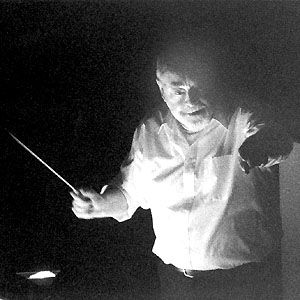
From left to right: Berkeley, Lambert, Lanchbery
Sources: Dutton Epoch & Hyperion CDs (my rips!)
Format: mp3, 320k/s (CBR), DDD Stereo
File Sizes: 171 MB / 158 MB
Lambert: Mars and Venus, Apparitions, etc. (re-up) – https://mega.co.nz/#!xN42SCRT!agnzY0ZvNu9Bi-VU2szfBjnoOH4vX935ZU0gr4lr5A8
Lambert: Pomona, Tiresias (re-up) – https://mega.co.nz/#!lJYxRJpT!H9ANq07UaJ8sWFd4kW3ui1nQV3R_zZF0b4hdBYF ONZ4
Enjoy! Don’t share! Buy the originals! 🙂
———- Post added at 12:30 PM ———- Previous post was at 12:13 PM ———-
No.135 (provided by tangotreats)
Upon my request, fellow member tangotreats is treating us (:)) to this upload of the first collaboration
by English TV and concert composers Dave Roylance and Bob Galvin. This "concept
album" features three works inspired by the age of the great sailing ships, with the half-hour
The Tall Ships Suite at the center. Also included is a symphonic poem entitled Ocean Fantasy,
and a shorter piece, Voyager. The Tall Ships was inspired by a race of old sailing
ships that was first held in 1992(!). All this music is really evocative of the sea and ships, with an
epic feel and a "filmic" atmosphere.
Music Composed by Dave Roylance & Bob Galvin
Played by the Royal Liverpool Philharmonic Orchestra
Conducted by Bill Connor
"Each year, as ambassadors for their respective countries, the International Fleet of Tall Ships visit selected
ports throughout the world during the various stages of the Tall Ships Race. For each port of call, the arrival of
this great flotilla offers an unparalleled spectacle and a rare opportunity to reach out and touch the living heritage
of an ocean racing tradition that began in the age of the tea clippers. Whatever the size – barques or barquentines,
sloops or schooners, there is no denying their enormous emotive appeal to the crowds – now in their millions who
flock to see them.
It was the advent of one of the most ambitious Tall Ships Races ever staged – the Grand Regatta Columbus ’92 –
that inspired Dave Roylance and Bob Galvin to compose the evocative music so magnificently recorded here by the
Royal Liverpool Philharmonic Orchestra. Here, embodied in music, is all the excitement and nostalgia generated
by a Grand Parade of Sail.
Beginning in April 1992, the Tall Ships sailed from Genoa and Lisbon via Cadiz and the Canaries to Puerto Rico,
passing near the Bahamas to arrive in New York for Independence Day. Thence to Boston in July, for ‘Sail Boston 1992’.
Then the race across the Atlantic, climaxing in the Port of Liverpool. There, in August, over one hundred Tall Ships,
some with masts towering up to 250 feet above the waterline, will pass by some two million spectators in a Grand
Parade of Sail as the Tall Ships leave to set out for their home ports.
Amidst this, the most memorable experience to be seen in any great port in our lifetimes, we should remember the
admirable aims of sail training which bring together young people of many nations to face together the challenge of
the sea and so contribute to international understanding."
Nigel Green, Chairman, UK Tall Ships Commitee
Source: Conifer CD (rip by tangotreats)
Format: FLAC, DDD Stereo
File Size: 222 MB
Download Link (re-upped by tangotreats) – https://mega.co.nz/#!o9IzASqR!DtMHMRRGTiONFvn7uvvrvVF4cdFm2c_Qjw-zEIFkvg4
Enjoy! Don’t share! Buy the original! 🙂
I think I’ll complete this thread with upload No.150. So if you have any special requests, send them to by PM or post
them in this thread.
An infectious, often riotous 2-hour collection of works by Mexican composers, recorded on
occasion of the country’s 2010 bicentennial. Naturally, pieces that overlap with Dudamel’s
"Fiesta" album invite direct comparison: Revueltas’ tricky Sensemay???, Moncayo’s rollicking
Huapango and M???rquez’s Danz???n No.2 are part of both collections – and, in all fairness to
Monsieur Dudamel and his enthuastic young players – are better served here.
Naturally, this twofer will sell nowhere near as well as Dudamel’s, because of all the hype.
Take the latter away, and you will find the present collection at the same time more comprehensive
and more focused. Apart from the "usual suspects" (like Rosas’ charming ersatz-Viennesse waltz
Sobre los Olas and El Tr???pico from Ch???vez’ Horsepower Suite) you also find the greatest
guitar concerto there ever was, Ponce’s Concierto del Sur, as well as substantial but unknown tone poems
and rhapsodies by Candelario Hu???zar, Mario Lavista, Federico Ibarra and others.
Unlike the Dudamel album, the de la Parra twofer also proves that exuberance and refinement need not
be mutual exclusives. The playing of the Philharmonic Orchestra of the Americas, which is comprised of
players from 22 different countries, most of them under 35, is in an entirely different league.
The conductor, who founded the orchestra in 2004, is Alondra de la Parra, whom I’ve never of heard of before
(Well, all you ever hear about Mexico these days is about drug warfare and illegal immigration into the US),
but on evidence of this collection, she’ll be a talent to watch out for. And not just because she’s hot.
Music by Jos??? Pablo Moncayo, Gustavo E.Campa, Ricard Castro, Candelario Hu???zar,
Manuel Ponce, Juventino Rosas, Arturo M???rquez, Silvestre Revueltas, Carlos Ch???vez,
Ferderico Ibarra, Eugenio Toussaint, Mario Lavista & Enrico Chapela
Played by Philharmonic Orchestra of the Americas
With Pablo S???inz Villegas (guitar), Daniel Andai (violin)
Conducted by Alondra de la Parra
"Issued by the giant Sony Classical label on the occasion of Mexico’s bicentennial in 2010, this album represents
something of an attempt to construct a Latin counterpart to the numerous collections of North American favorites
on the market. One key to making such a release successful is to combine chestnuts with a few unexpected selections,
and that’s what conductor Alondra de la Parra does here. She’s an interesting figure: young, charismatic, born in New
York, raised in Mexico City, and educated in Britain, Mexico, and the U.S., she seems ideally situated to convey the riches
of Mexican music to a wider audience, and she has even formed her own group, the Philharmonic Orchestra of the Americas.
To that end. The program begins with a work that’s a chestnut for Mexican listeners, although perhaps not for outsiders: the
Huapango of Jos??? Pablo Moncayo. de la Parra then moves through various phases of Mexican modernist movements of the
early and middle 20th century, covering familiar pieces such as Ponce’s Concierto del sur for guitar and orchestra, as well
as nice finds (at least for non-Mexicans as Candelario Hu???zar’s Im???genes, an Impressionist work that de la Parra captures
nicely with the word "surrealistic"). A good deal of the second disc consists of recent compositions, and several of these
would fit beautifully on modern symphonic concerts. Eugenio Toussaint’s Concierto para piano improvisado y orquesta, here
excerpted, is a full-blown jazz concerto. The most fun may be the finale, Ernesto Chapela’s ???nguese, whose title is a sort of
wordplay involving probably the strongest obscenity ever to become part of a classical composition. between Mexico and Brazil,
with the Mexican team represented by the winds and the Brazilians by the brass, the crowd by the strings. The conductor, naturally
enough, is the referee. Chapela has said he was inspired by the foul language and insults hurled by fans on both sides, and that
he could not think of a better contemporary representation of nationalism than a soccer match. The result is something like Ives
in a rough-and-tumble Latin American context, and it’s a nice sendoff from an exciting ride. Recommended not only as a handy
collection of Mexican favorites, but also for those interested in new directions in Mexican music."
All Music
 http://i1084.photobucket.com/albums/j415/wimpel69/smiley.gif
http://i1084.photobucket.com/albums/j415/wimpel69/smiley.gif
Source: Sony CDs (my rip!)
Format: mp3, 320k/s (CBR), DDD Stereo
File Size: 271 MB
Download Link (re-up) https://mega.co.nz/#!dIgygKjD!cZDowTmZ3XyJYkl9pRD3LDS5qRE8naglhcGVFJD a-D0
Enjoy! Don’t share! Buy the original! 🙂
I think the same , thanks wimpel69.
No.137
The French conductor and composer Manuel Rosenthal was born in Paris in 1904 and studied
the violin at the Paris Conservatoire, with lessons in counterpoint from Jean Hure and in composition
from Ravel. From 1934 he was joint conductor and from 1944 to 1947, chief conductor of the Orchestre
National of French radio, conducted the Seattle Symphony Orchestra from 1948 to 1951, and thereafter
enjoyed an international career. His compositions include operas, scores for the ballet, orchestral and
choral works, chamber music and songs.
Music Composed by Manuel Rosenthal
Played by the Orchestre Symphonique et Lyrique de Nancy
Conducted by J???r???me Kaltenbach
Coming to the orchestral works and songs on this compact disc. It is a sort of musical portrait
of Rosenthal the composer. ..
M.R.: Yes, in fact. It is a thing that gives me great satisfaction in this recording. In the space of
little over an hour it gives a very complete idea of my work, with, in addition to the songs, orchestral
work that is restrained and colourful, Les petits metiers, a work for full orchestra, and Musique de table.
This last belongs to a category that is little exploited, the concerto for orchestra. In this composition, under
the pretext of a Pantagruellian meal, one hears the instruments of the orchestra as soloists, in sections and
all together. It is a very difficult score, intended to underline all the instrumental possibilities of sonority and
virtuosity, and I am very satisfied with the interpretation offered by the Orchestra of Nancy which has brought
out certain details much better than other groups: I think, for example, of a wonderful tuba. I performed
this work first with the Orchestre National. Then the BBC Orchestra played it … after having refused to do
so, arguing its great difficulty. The same thing happened with the New York Philharmonic. I then suggested
that they should hear the Orchestre National. ..They finally accepted.
Basically, the listener who enjoys a concert knows nothing of the complex life of an orchestra. He has in front of
him an "enterprise" of a hundred people who live together for one sole thing, music. This is perhaps the
morallesson of a concerto for orchestra such as Musique de table.
Les petits metiersis an earlier work?
M.R.: Yes. It dates from 1933. Originally it was a suite for piano commissioned by Magda Tagliaferro that
I later orchestrated. In this score I have put my memories of the urchin I once was in the streets of Paris. They
were full of the songs of the trades-people, glazier, knife-grinder and so on. But I did not forget the wet-nurses
who fed the new-born children of richer families, the soldiers or the little telegraph-boys, urchins of twelve or
thirteen years old who carried telegrams by bicycle. In short, all those little trades that favoured exchange
between people and contributed to a very French and very cheerful atmosphere.
And the vocal works?
M.R.: This programme shows my interest in the voice in three different ways. First the Deux poemes
de Jean Cassou belong to a collection for which I had the idea, the Album Musical de la Resistance, in which
I asked some of my friends in the resistance to set poems.
In quite a different spirit are the three songs on poems by a friend, Marie Roustan. These poems are very
urbane, very light, but I took particular care with the orchestration.
As for the three Prieres courfes, they cultivate a reduction in the use of the orchestra in order to bring out the
meaning of the text. Apart from my stage- works, these give a complete over-view of my vocal compositions.
Interview with Manuel Rosenthal
Source: Marco Polo CD (my rip!)
Format: mp3, 320k/s (CBR), DDD Stereo
File Size: 145 MB (incl. cover, booklet)
Download Link (re-up) – https://mega.co.nz/#!VMBBXCLL!DyXHkG7LZWAtn_EK8r7C1T5nR3dMSj2mNbIehpb yWJM
Enjoy! Don’t share! Buy the original! 🙂
Thanks!
Famous for its harmonically unchallenging, smooth and entertaining melodic lines, British Light Music grew from the
indulgent and sentimental music of the 19th Century, from composers such as Arthur Sullivan, to become one of the
most popular classical musical styles in Britain during the first half of the 20th Century. British Light Music is often
referred to as easy listening and usually instantly recognisable. Whilst the genre may not advocate ground breaking
compositional techniques, it is not always limited to its convivial facade, sometimes parodying more serious classical
music through citation of theme and motif.
British Light Music is, for the most part, a form of programme music, with each piece designed to represent a mood,
object, place or event. It was this quality, which made it ideal for broadcast throughout the heyday of radio, leading
to the introduction of The BBC Light Programme in 1945, and during the advent of television, where British Light
Music featured as the introduction to many early programmes. It was, in fact, these two mediums, which
facilitated its success.
The genre’s popularity was complemented by its use in film; notably, and amongst many others, in the 1939
version of Goodbye Mr Chips with the soundtrack by Richard Addinsell, and the 1955 World War II classic
The Dam Busters, which featured the famous “Dam Busters’ March” by Eric Coates. Although the style has
declined since the early 1960s, its use in film has contributed greatly to its longevity.
Famous British Light Music composers include Ernest Tomlinson, Edward German, Haydn Wood,
Richard Addinsell and Eric Coates, the last of whom is described as the
‘father’ or ‘king’ of British Light Music.
Music by Ernest Tomlinson, Clifton Parker, Phillip Lord, Carlo Martelli, Anthony Hedges,
Peter Flinn, Corey Blyton, Lionel Sainsbury, Adam Saunders & Richard Valery
Played by the Royal Ballet Sinfonia
Conducted by Gavin Sutherland & Paul Murphy
"Ernest Tomlinson (*1924) – A prolific writer with boundless energy, Tomlinson has been one of the major
figures in British light music during the second half of the twentieth century. Delayed by war service in the
RAF, his musical career began as a staff arranger for a London publisher after graduating in 1947 with a
degree of Bachelor of Music for composition. Tomlinson was soon in demand for radio, television, stage and
recording commitments, providing numerous arrangements as well as, occasionally, his own compositions –
the first was broadcast in 1949. Many of his own works were first heard with his Ernest Tomlinson Light
Orchestra (formed in 1955), and his ‘Little Serenade’ (1955) was destined to become a light music standard.
Later the same year his work for the radio play The Story Of Cinderella finally allowed him to become a full-time
freelance composer. His north country roots explain Tomlinson’s love of brass bands and choirs, and he has
been active in both these areas. ‘An English Overture’ was originally conceived for brass band, but it
transferred well to full orchestra. Of special importance have been his suites of ‘English Folk-Songs’ –
the first was in 1949 (receiving the first performance at the English Folk-Dance and Song Society’s
New Year Festival at London’s Royal Albert Hall in January 1950), and the second suite followed in 1977.
Many of the individual movements have become recognized in their own right, with wonderful titles such
as ‘Dick’s Maggot’, ‘Jenny Pluck Pears’, ‘Woodicock’ and ‘Love-in-a-Mist’. Other popular works include
‘Concert Jig’ (from the ‘Silverthorn Suite’), ‘Kielder Water’, ‘Comedy Overture’, ‘Mediterranean Suite’, ‘English
Pageant Suite’, the ‘Light Music Suite’ (1971) and ‘Passepied’. Tomlinson has been a tireless worker for his
profession, serving in various capacities with the Light Music Society, the Composers’ Guild of Great Britain
and the Performing Rights Society. He is the recipient of the Composers’ Guild Award (1965) and two Ivor
Novello Awards (1970 and 1975). In 1984 he founded The Library Of Light Orchestral Music which is housed
in a huge barn at his farmhouse in Lancashire, and contains over 10, 000 scores, many of which would
have been otherwise lost."
Source: Dutton Epoch CDs (my rips!)
Format: mp3, 320k/s (CBR), DDD Stereo
File Sizes: 168 MB / 167 MB
Tomlinson: Aladdin Suite, etc (re-up) – https://mega.co.nz/#!YJZ0hZLZ!fS5GBD50y7awZY6Vh2S4_U1X-4MiarktntOMhrWu7As
Tomlinson: Rhythmic Overture, etc (re-up) – https://mega.co.nz/#!VURSHY5Z!AqTOgThOkhgIKy_zrx1oVGVFakYPbGMxOgmwD_m SqA4
Enjoy! Don’t share! Buy the originals! 🙂
This is a very rare and pleasant album.
Keep ’em coming!
———- Post added at 07:46 AM ———- Previous post was at 07:41 AM ———-
Since I’m under the impression that interest in this subject is on the wane, or maybe it has reached a certain level of saturation,
I think I’ll complete this thread with upload No.150. So if you have any special requests, send them to by PM or post
them in this thread.
What makes you think so?
Classical music lovers may be a minority, but are a faithful minorityPlease, don’t abandon this most wonderful thread!
Carlo Alberto Pizzini (not to be confused with Ildebrando Pizzetti!) was born in Rome on 22 March
1905 and studied composition with Ottorino Respighi. He graduated from the Bologna Conservatory in 1929.
As a conductor he gave concerts all over the world, usually featuring his own compositions. He wrote in
almost every form, from chamber music through music for choir, orchestra and band to incidental music for
theatre, television and films.
The symphonic triptych Al Piemonte was inspired by the history, the natural beauty and the famously
zealous work-ethic of the Piedmont region of northern Italy, where the Roman-born Pizzini lived and worked
for many years. The aspects of Piedmont that most appealed to Pizzini – the great aspirations, struggles
and glories of its history; the grandeur of its mountains and valleys; and the vigour of the people, especially
soldiers and tireless workers in field and factory – are reflected in the three sections of the music.
In the composer’s imagination, the spectacular natural beauty of the Dolomites mingles with memories
of heroic Italian wartime exploits. So in the first part the sun’s exaltation of the summits is fused musically with
an evocation of the trumpet blasts of a victorious army, and the transition to the second part has another fleeting
allusion to war, hinting at the martial rhythms of a phalanx of soldiers. The serenely pastoral melody of the
second part, introduced by the cor anglais, returns in the final part in a more violent, energetic and warlike form.
The third part, which has the character of a Scherzo, is inspired by the poetry of the landscape and
the legends attributed to it in the popular imagination.
Strapaese – Impressioni dal vero (1932) is an impression of the feast-day of the
Assumption of the Virgin Mary, 15 August, in the province of Lazio – to be precise, the small town of
Gerano not far inland from Rome, near the larger and better-known Subiaco. At dawn on the day of the
festival – in a ‘joyous Allegro’ – a drummer does the rounds, beating the traditional reveille. The villagers
gather, awaiting the return of those who have made the pilgrimage to the shrine of the Virgin. When the
procession of pilgrims reaches the main square, it is welcomed by the village band and everyone joins in
the celebration, with joyful songs, fireworks and dancing the saltarello.
This music is a lot like film music on a larger canvas – think Mikl???s R???zsa meets Respighi, if you will.
Music Composed and Conducted by Carlo Alberto Pizzini
Played by the Munich Philharmonic Orchestra
"At a time when the world’s musical establishment had fallen into the hands of those promoting atonality, the Italian composer,
Carlo Alberto Pizzini, was no longer regarded as fashionable. He led a very diverse life that included conducting in many parts
of the world, while those thirty-four years from 1938 were equally occupied as an executive of Italian Radio and Television
(RAI). His compositions were very diverse, but they all showed a debt he owed to his mentor Ottorino Respighi. He was
particularly active in film and television music, and that influence also coloured his symphonic output, the 1940 triptych
of pictures, Al Piemonte, standing akin to a Hollywood travelogue of the northern Italian region of Piedmont. Completed in 1940
it is very different to a solitary Scherzo movement he had written as part of a student exercise, the work taking its inspiration
from Beethoven and Schubert. That same year he composed the four movements Il poema della Dolomiti reflecting a journey
from daybreak through the mountainous Italian Dolomites, ending, like Respigh’s Pines of Rome, with a picture of a victorious
army. He again goes back in time to pay homage to the style of Corelli in the Sarabanda per archi, ‘Omaggio a Corelli’,
his impression of a feast day in a small town celebrating the Assumption of the Virgin Mary captured by Strapaese –
Impressioni dal vero. More Italian pictures in Grotte di Postumia (The Caves of Postojna) expressed in a theme and variations.
The whole disc adds up to a pleasing experience, and as film music it would be highly valued and much praised."
David Denton
Source: Naxos CD (my rip!)
Format: mp3, 320k/s (CBR), ADD
File Size: 133 MB (incl. cover, booklet)
Download Link (re-up) – https://mega.co.nz/#!yhh2AIDL!EDwlyCQ8HCqjqMqm33Apw0ss9ydtmQQOm6g9PYg 0Yqk
Enjoy! Don’t share! Buy the original! 🙂
Thanks!
Stevan Hristic was the most famous 20th century Serbian composer, and the ballet The Legend of Ohrid is his
best-known work. As could be expected, the score has strong patriotic fervour and is extremely colorful, rhythmically alert,
with a tendency to sound brash. Josip Slavenski was a Croatian composer, and his Balkanophonia really
makes a good coupling with the Hristic. It’s "pan-Balkan", as it includes Croatian, Albanian, Serbian and Bulgarian folk
influences. Powerful and unapologetic music this is.
Music Composed by Stevan Hristic & Josip Slavensky
Played by the Radio-Philharmonie Hannover des NDR
Conducted by Moshe Atzmon
"Stevan Hristic (1885-1958) was a composer, conductor, and pedagogue, and pivotal in the development of Serbian art music
in the first half of the twentieth century. His ballet `The Legend of Ohrid’ (1947) is apparently one of this most popular
works, but it seems to have failed to make any international headway. It was also the first Serbian ballet, and is based on
a folk story with plenty of magic, romance, and chivalry. More importantly for those who consider acquiring this disc is the
music, however, and Hristic’s colorful musical language is characterized by a rich melodic invention and an expert and colorful
scoring. Stylistically it is somewhat conservative (but versatile) and relies on post-romantic and post-impressionistic
elements, infused with folkloristic influences.
CPO gives us the four suites, a total of 35 minutes, and it is all enormously fun, inventive, imaginative, catchy and powerful
music. Suite no.1 opens with an energetic Introduction leading to a rhythmically rich and colorful Serbian Dance. It is followed
by an ostinato-based, haunting Greek Dance, the boisterous and martial Dance of the Janissaries and the merrily lyrical and
splendidly memorable Song of the Turtledove. The second suite consists of a single track in three segments; it opens with a
slow, solemn interweaving of some of the central themes from the work, followed by a more optimistic middle part before
returning to gloom. The third suite contains a wonderfully colorful and impressionistic evocation of a magic lake, leading to
an increasingly intense dance of the water nymphs and culminating in a vigorous sword dance powerfully contrasted with
the defiant Biljana’s dance. The fourth suite is a jolly divertissement, splendidly catchy and brilliant. Overall there may not
be much profundity to the music, but it is spectacular fun and anyone who enjoys, say, the ballet music of Khachaturian
(or the Kod???ly dance sets) will surely love this one (Hristic also avoids Khachaturian’s occasional lapses
into banality or autopilot).
The Croatian Josip Slavenski (1896-1955) was another crucial composer in the development of Yugoslavian musical life
(Decca recorded some of his music in the 1950s, but these recordings show no sign of being made available anytime soon).
His music is also inspired by folk-music, but Slavenski was more forward-looking in terms of expressive possibilities than
Hristic, and is much closer to the music of, say, Bart???k. His "symphony" Balkanophonia was premiered in 1928 but sounds
far more modern than Hristic’s ballet. It is nevertheless an engaging, expressively rich, essentially picturesque and often
powerful work, richly scored and with plenty of piquant harmonic treatment of innocently simple tunes.
The performances by the Radio-Philharmonie Hannover des NDR under Moshe Atzmon are splendid; exuberant, colorful,
rhythmically alive, vibrant and powerful. They seem to enjoy themselves in particular in Hristic’s colorful work, but the
Slavenski is very well performed as well, full of color and vigor. The sound has a very wide dynamic range, but is
crystal clear and very spacious. To sum up, this is a splendid release – neither work will probably change the world
or one’s perception of twentieth century musical history, but this is still an hour (well, a little less – the playing time
is not overly generous) of sheer fun and excitement. Enthusiastically recommended."
Amazon Reviewer
Source: CPO CD (my rip!)
Format: mp3, 320k/s (CBR), DDD Stereo
File Size: 125 MB
Download Link (re-up) – https://mega.co.nz/#!4NASmJQQ!HQlqHFXypqyAZ-3fsvm1ShRQgnUrtxLArwNvycRkdAI
Enjoy! Don’t share! Buy the original! 🙂
please do not take my own (and perhaps other people’s) lack of response as a sign of disinterest. The abundance of new and unfamiliar music you introduce is absolutely overwhelming. It is hard to say thanks with a stuffed mouth, so to say.
However, if you don’t mind, I would surely welcome you taking a break for a while, just in order for me to catch up to the ever expanding queue that is the result of both your generous sharing and the limitations of Depositfiles . But by all means: Don’t stop and please continue to educate me in future.
No.141
Anthony Iannaccone (born New York City, 1943) studied at the Manhattan School of Music and the Eastman
School of Music. His principal teachers were Vittorio Giannini, Aaron Copland, and David Diamond. During the
1960’s, he supported himself as a part-time teacher (Manhattan School of Music) and orchestral violinist.
His catalogue of approximately 50 published works includes three symphonies, smaller works for orchestra,
several large works for chorus and orchestra, numerous chamber pieces, large works for wind ensemble,
and several extended a cappella choral compositions.
Iannaccone’s Waiting for Sunrise was chosen as one of five finalists in the 2001 Masterprize competition
from a field of 1151 orchestral works submitted. Other recent commissions include a quintet for clarinet
and strings for Richard Stoltzman.
Music Composed and Conducted by Anthony Iannaccone
Played by the Jan???cek & Bohuslav Martinu Philharmonic Orchestras
"I can’t be more direct: Night Rivers (1990-92), the Third Symphony of Anthony Iannaccone is stunning-a
rare work that achieves a dramatic balance of the cerebral and visceral. To my mind, it is one of the supreme
American symphonies. …After listening to Night Rivers frequently over the past four years and never failing to
be enthralled by the insights of its argument and development, I have been moved to submit a "Hall of Fame"
review for only the second time. …Somehow, even in its fortissimo parts, the Symphony retains an aura of
misterioso. The music’s sonic diversity and ensembling of colors are masterful, and its progression toward a
conclusion, even in its more-or-less static passages, keeps the listener enthralled hearing after hearing. And
not since George Rochberg’s quite different Symphony No. 2-a neglected masterpiece… do I remember being
so convinced by a symphony’s quiet ending as I am by that of Night Rivers. A further sample of Iannaccone’s
compositional gift can be heard in his Two-Piano Inventions on an even-more-difficult-to-find Redwood CD."
Fanfare
Source: Albany Records CD (my rip!)
Format: mp3, 320k/s (CBR), DDD Stereo
File Size: 153 MB (incl. cover, booklet)
Download Link (re-up) – https://mega.co.nz/#!5ZZHgLDQ!I_MT9SSjF_ayp9M3nz-RiW72L0opai1OgjDXN4J7104
Enjoy! Don’t share! Buy the original! 🙂
Kara Karayev was a leading figure in Azerbaijani music after World War II. Born in Baku in 1918, he
studied piano under Sharoyev at the Baku Music Technical School (1930-35) eventually entering the
Azerbaijan State Conservatory where his teachers were Rudol’f and Hajibeyov. He studied Azerbaijani
folk art, transcribed ashug songs and dances and began composing. In 1938 he entered the Moscow
Conservatory to study composition with Anatoly Alexandrov (composition) and Sergei Vasilenko
(instrumentation). From 1942 to 1946 he studied composition with Dmitri Shostakovich.
The two compositions on this disc date from the 1950s when Karayev was influenced by the
writings of poet Nizami. According to musicologist Yuriy Gabay, “The picturesque clarity of Karayev’s
thought and his profound feeling for music drama are most clearly displayed in the ballet Seven Beauties.
The ballet Seven Beauties was completed in 1952 and premiered that year at the Baku Opera and Ballet
Theater. The plot of Seven Beauties deals with the conflict between the oppressed people, symbolized
by the lovely Aisha, and the corrupt rulers, the Shah Bakhram and his Vizier.
Karayev’s second ballet In the Path of Thunder was written in 1957 and won the 1967 Lenin Prize.
According to Yuriy Gabay, “The composer’s social engagement, already strongly evident in Seven
Beauties, becomes still more important: the deaths of the black man and the white woman, guilty only of
love for each other (the plot is based on a novel by the South African writer Abrahams), constitute not
only a personal but also a social tragedy. In the score Karayev uses black South African folk music,
but altered according to his own creative ideas.
Music Composed by Kara Karayev
Played by the Moscow Radio and Television Symphony Orchestra
Conducted by Rauf Abdullayev
"From the outset Seven Beauties, reported to be the first ever ballet by an Azerbaijani composer, is reminiscent
of the music of the Jazz Suites of Shostakovich, with whom Garayev did in fact study composition. The second
and several other of the eleven movements, however, are more like something by Malcolm Arnold or Mikl???s R???zsa –
more in common with 1950s Hollywood than what was going on musically or socially behind the Iron Curtain.
The slightly later ballet suite, In the Path of Thunder, is in a similar vein, though perhaps more discerning. The ballet
tells the bitter-sweet tale of interracial lovers in apartheid-era South Africa ultimately meeting a tragic end, thereby
causing The People to rise up against their oppressors: cue thoughtful, romantic, rousing themes skilfully interwoven
into an attractive narrative.
Any anticipated exotic/indigenous elements borrowed from South African or Caucasian folk music, referred to
repeatedly in the booklet notes, are surprisingly sparse. Even the extended central section of Seven Beauties,
featuring five consecutive national dances from as far afield as India and China, is heavily sieved through European
musical precepts. Anyone looking for exotica would find more in Rimsky-Korsakov or his pupil Mikhail Ippolitov-Ivanov,
both of whom successfully imbued their music with an Oriental fragrance fifty years earlier.
Given the stories told by, and the general nature of, the ballet, this is music of grand emotional sweep, cinematographic
in that 1950s Hollywood way. There is little subtlety or profundity as such, yet Garayev was, like Arnold and
Rimsky-Korsakov, a master orchestrator, and for anyone interested in orchestral colour and drama – not to mention
lots of pleasing melody, catchy rhythms and easy-going tonal harmony – from a neglected musical figure straddling
two continents, this CD is worthy of consideration."
Musicweb

Karayev on the right, his teacher Shostakovich at the piano.
Source: Delos CD (my rip!)
Format: mp3, 320k/s (CBR), DDD Stereo
File Size: 181 MB (incl. cover, booklet)
Download Link (re-up) – https://mega.co.nz/#!vpggDYxS!P4ItvmM-SgQfTnSiLI3d9lPHoIYXOP02Nxw2dS29SdE
Enjoy! Don’t share! Buy the original! 🙂
Ippolitov-Ivanov, Rimsky-Korsakov and Khachaturian all rolled into one!
Thanks a lot, wimpel!
Alfred Bruneau (1857-1934) was an influential French composer who collaborated with the great writer
???mile Zola on a series of operas in an attempt to introduce more social realism into a genre previously
dominated by melodrama and light comedy. All three works on this album are orchestral selections
from operas: Messidor, the composer’s most famous work, L’Attaque du Molin (The Attack on the Mill)
and Nais Micoulin. The musical language is, as so often in this era of French music, strongly
influenced by Richard Wagner.
Music Composed by Alfred Bruneau
Played by the Rheinische Philharmonie Koblenz
Conducted by James Lockhart
"Messidor is a four-act operatic drame lyrique by Alfred Bruneau to a French libretto by Emile Zola. The opera premiered on
February 19, 1897 in Paris. The opera takes its name from the tenth month of the French Republican Calendar.
Although initially successful, the popularity of Messidor was adversely affected by the Dreyfus Affair which was
occurring at the time of the opera’s premiere. Because both Bruneau and his good friend Zola were active supporters
of Alfred Dreyfus during his trial for treason, the French public did not welcome the composer’s music
for several years afterward.
The collaborations between Bruneau and Zola, of which Messidor is the most notable, were considered
an attempt at a French alternative to the Italian verismo movement in opera.
Set in Ari???ge, a region in the south-west of France, the opera tells the story of a greedy peasant, Gaspard,
who has appropriated for himself a gold-bearing stream, which had previously provided income for the entire
community. His daughter, H???l???ne, and Guillaume, a young and virtuous man, fall in love, but Guillaume’s mother,
V???ronique, has accused Gaspard of murdering her husband. Ultimately Gaspard’s mining operation fails, and his
cousin Mathias is found to be the real murderer."
Source: Marco Polo CD (my rip!)
Format:mp3, 320k/s (CBR); DDD Stereo
File Size: 130 MB (incl. booklet)
Download Link (re-up) – https://mega.co.nz/#!hZQTHQ5J!Jbsubjy8ohmTkGF8w-s5uheIZ8Ao24exhJd4UL687YU
Enjoy! Don’t share! Buy the original! 🙂
———- Post added at 02:44 PM ———- Previous post was at 02:04 PM ———-
No.144
Isotaro Sugata was born on the 15th November 1907 to a rich family in the port city of Yokohama. As a child he
attended a missionary school founded by the American Baptist Free Mission Society at Kanto Gakuin,
encouraged by the hymns he heard to study piano, violin, theory and singing. His education came to an end
in 1927, when he contracted tuberculosis, thereafter to concentrate on composition. From 1928 he started
taking private lessons with noted composers in Japan. His first teachers were K???s???ak Yamada and Kiyoshi
Nobutoki, who had both studied in Berlin and taught him academic music theory in the German tradition.
Dissatisfied with that he turned to post-Debussy music.
Symphonic Overture and Peaceful Dance of Two Dragons were both composed in celebration of the
2600th Year of the Emperor. The year 1940 fell on the 2600th year of Japan’s own official year system, which
is based on the year of the enthronement of Emperor Jinmu, the mythical first emperor of Japan. These
works were among those commissioned from Japanese and distinguished foreign composers to mark the
occasion. Symphonic Overture was a product of the study of Hindemith under Pringsheim. Taking Hindemith’s
symphony Mathis der Maler, as a model, above all for its first movement, it was completed on 10th December
1939 and won a prize at the Competition Celebrating the 2600th Year of the Emperor held by the NHK.
Peaceful Dance of Two Dragons attempts to combine the style of Gagaku, Japanese ancient imperial
music, and Sugata’s interest in Stravinsky and Bart???k.
The Rhythm of Life, music for ballet, was completed on 20th September 1950 and belongs to
Sugata’s last years. In this work he recalls the starting point of his creative life. Like his two earliest works
Yokohama and Sakura, this work quotes various materials from Stravinsky’s Le sacre du printemps,
Petrushka and L’oiseau de feu, forming an idiosyncratic patchwork of Japanese melodies and
fragments from Stravinsky, in a cut-and-paste manner. Its compositional technique even
foresees postmodernism.
Music Composed by Isotaro Sugata
Played by the Kanagawa Philharmonic Orchestra
Conducted by Kazuhiko Komatsu
"Akira Kurosawa’s film Sanshiro Sugata (1943) was about a young man who leaves his country home to study Jujitsu
in the city, but on his way manages to master Judo instead, and becomes a renowned master of the art. Japanese
composer Isotaro Sugata was not a fictional character; he began life with a wealthy family in Yokohama, and once
he discovered music as his vocation he went through a series of masters, trying to get a grip on Western scoring in
order to create a unique blend of his own with traditional concepts. Sugata’s journey brought him into contact with
pedagogue Klaus Pringsheim, and by the mid-’30s, Sugata was making a name for himself. His reputation sidelined by
the outbreak of war, Sugata fled to a small town in the center of Honshu for safe haven. Unlike Sanshiro Sugata,
this city dweller never made it back out of the country; Isotaro Sugata remained there in obscurity, composing still,
but unable to practice his craft professionally or to obtain performances, dying in 1952 at age 44. Sugata’s music
manuscripts were lost until the late ’90s; the recordings on Naxos’ Sugata: Peaceful Dance of Two Dragons are not
only the first recordings of this music, but in the case of two of the four works are also practically first performances.
Dancing Girl in the Orient (1941) and ballet The Rhythm of Life (1950) were not heard in public when minted new and
had no prospect of it, owing either to war or Sugata’s self-isolation. Conductor Kazuhiko Komatsu and the Kanagawa
Philharmonic Orchestra have been advocating the work of Sugata through reviving his scores, and do so passionately
here — as the orchestra of Kanagawa Prefecture, it is the symphonic body closest to the port city of Yokohama,
Sugata’s birthplace.
It’s a terrible shame that Japan lost touch with Sugata, as judging from these works he was surely one of the most
talented figures among composers of early Japanese orchestral music. The ballet music The Rhythm of Life is obviously
the showstopper of the set, with its echoes of Stravinsky and warring trombones; however, Peaceful Dance of Two
Dragons (1940) really does seem like a very successful merger between the technical resources of the West and the
traditional music of Japan. The Symphonic Overture (1939) comes straight out of his study with Pringsheim and has a
slightly neo-classic, Hindemithian flavor. Dancing Girl in the Orient (1941) draws from the example of Rimsky-Korsakov
and sounds almost like Alfred Newman with a Japanese accent. Indeed, Sugata’s music would have been an easy match
for the Japanese film industry of the period, and it seems unconscionable that he would not at least try to find work
there. It is as though Sanshiro Sugata had managed to learn Jujitsu, but not Judo, and had become a warrior, but
not a legend."
All Music
Source: Naxos CD (my rip!)
Format: mp3, 320k/s (CBR), DDD Stereo
File Size: 120 MB (incl. cover, booklet)
Download Link (re-up): https://mega.co.nz/#!gVQxSLRb!Mii7tjhrQucg7f31aqoua3VuxcAl9RIwcenPkkm bu-M
Enjoy! Don’t share! Buy the original! 🙂
Have a nice weekend. 😀
Iannaccone sounds promising as well. ( just started listening) It definitely fits the ‘could be film music ‘ title of this topic.
No.145
John Duffy (*1928) has composed more than 300 works for symphony orchestra, theater, television and film.
His music has earned many awards including two Emmys, an ASCAP award for special recognition in film and television music,
a New York State Governor’s Art Award and the (New York City) Mayor’s Award of Honor for Arts and Culture. He grew up
in the Bronx, one of fourteen children of Irish immigrant parents. When he was still a young man, composition studies with
Aaron Copland, Henry Cowell, Luigi Dallapiccola, Solomon Rosowsky and Herbert Zipper proceeded concurrently with his
career and early successes in theater.
Actually, the featured Duffy score (Heritage Symphonic Dances, Heritage Fanfare & the Heritage Symphonic Suite)
don’t belong here, because while these are arrangements used for symphony concerts, they are based on Duffy’s 1984 Emmy Award-winning
television score for the 9-hour PBS documentary Heritage: Civilization and the Jews, which deals with the worldwide history of the
Jewish people through the centuries. The composer also received a Peabody Award for the music, from which he extracted these (and several
other) selections. Leonard Bernstein’s Dance Episodes from On the Town make a nice coupling.
Music Composed by John Duffy & Leonard Bernstein
Played by the Royal Philharmonic Orchestra
Conducted by Richard Williams
"The history of the Jews is a history of involvement: with Near Eastern and Classical civilization
in the Biblical period, with Christendom and Islam in the Middle Ages, with the nations of all the earth in
modern times. It is a history as old as civilization itself, and it is the history of the involvement of one people
with civilization. The involvement was total, complex and reciprocal. It was total in the sense that the
Jewish people never enjoyed the luxury of detachment: even when intermittently masters of in their own
land, that land was the vortex of all surrounding lands and shared their fates. It was complex in the
Jewish people, before and above any other people, experienced the tension of diaspora and homeland,
a tension ever shifting but never resolved. It was reciprocal in that Judaism took, learned and borrowed
from the civilizations of other peoples – but at the same time contributed in essential respects to
civilization at all times and in many different places.
The interaction of Jewish history and Western civilization successively assumed different forms. In the
Biblical and Ancient periods, Israel was an integral part of the Near Eastern and classical world, which
gave birth to Western civilization. It shared the traditions of ancient Mesopotamia and the rest of that
world with regard to it’s own beginning; it benefited from the decline of Egypt and the other great
Near Eastern empires to emerge as a nation in it’s own right; it asserted it’s claim to the divinely promised
Land of Israel and struggled to a precarious independence there for a thousand years until forced to
yield to the greater power of Greece and Rome.
In the Medieval era Jewish history took place on a larger stage, including all of Europe and the
Mediterranean world. Fewer and fewer Jews were able to remain on the soil of the Holy Land itself.
For more and more of them, it became the object of prayerful longing as they sought refuge in all the
lands of the dispersion. Gradually the pious hope of a return to the true homeland gave way to the
more practical desire to participate in the life of their new surroundings. But no matter how deeply
the Jews became involved in the various lands of the dispersion, they faced the necessity of being
uprooted again and again. They became the classical example of a diaspora population: confined or
committed to intellectual or commercial pursuits; linked to their co-religionists in other lands through
the bond of a common faith as interpreted by rabbinic authority; and an ever yearning to live, or at
least to die, in the Holy Land.
The contemporary pattern of Jewish life presents another model for it’s interaction with civilization.
Where previously that life had been concentrated successively in Israel and the diaspora, it is now balanced
between the two. Israel is once again politically sovereign, and it commands a central position in Judaism,
both culturally and emotionally. But equally significant centers of Jewish population and hence of Jewish
cultural, religious, and political activity exist in the United State, the Soviet Union and other parts of
the diaspora. World Jewry, as always, continues to gravitate towards the rising centers of world
civilization and hence to play a part in the shaping of world events. At the same time it lives in a
creative tension with Israel. The interdependence of diaspora Jewry with the Israel on the one hand
and with world civilization on the other, characterizes the present scene and will no doubt influence
yet other patterns, whatever the precise shape they may take in the future."
PBS
Source: ASV CD (my rip!)
Format: mp3, 320k/s (CBR), DDD Stereo
File Size: 138 MB (incl. covers, booklet)
Download Link (re-up) – https://mega.co.nz/#!scw0lBiT!KopUh2LrV-seBX-BqPNM11yzB1s3FtJiB1jovNTdqNA
Enjoy! Don’t share! Buy the original! 🙂
———- Post added at 08:55 AM ———- Previous post was at 08:40 AM ———-
No.146
At first glance the eclipse during his lifetime of Igor Markevitch’s (1912-1983) reputation as a composer appears due,
more than any other single factor, to the dimensions of his success as a conductor. What has yet to be fully explained,
however, is why his life divides so dramatically and uncompromisingly into two halves—clearly a conscious decision on
his part, and one whose true reasons this intensely private man seems to have sought to keep hidden. Markevitch’s
last original composition was written in 1941 at the age of 29, and he never again returned to the creative endeavours
that had brought him such renown and adulation when barely in his twenties. The trauma of the Second World War
marks a sharp dividing line during which the composer appears to have undergone a mental, as well as physical crisis.
Originally conceived in a collaboration with the American poet Edward James, Le Nouvel ???ge was intended to
become a sort of opera-oratorio, a companion piece to Le Paradis perdu of three years before. The joint project
had not advanced far when James, taking advantage of the composer’s absence in Paris for a few days, attempted to
seduce his wife, Kyra Nijinska. Scandalised, Kyra demanded that James be stripped of his status as god-father to their
son Vaslav, and banished from their lives. “My poor Nouvel ???ge remained afloat as best it could in the midst of these
storms”, relates Markevitch. Completed in this overwrought emotional atmosphere (“the matter dragged on for several
months”), Le Nouvel ???ge became perhaps Markevitch’s most intense, most tightly constructed and most enduring work.
At the time of the composition of the Sinfonietta, Markevitch was powerfully under the influence of his teacher,
the great Nadia Boulanger, who had recently excited him with a lengthy analysis of Hindemith’s Concerto for Orchestra,
Opus 38. Traits of the latter work were to emerge even more strongly in the younger composer’s Cantata and
Concerto Grosso in the following year, but the classicism and attention to form and technique of Sinfonietta are
already noteworthy indicators of what was to come. The final movement of the Sinfonietta was originally composed
as a part for a prospective ballet which was never completed.
In the period immediately following the death of Dyagilev on 19 August 1929, Paris was awash in choreographic
projects, each clamouring to fill the sudden void. One of these was an idea conceived by Leonid Massine for a film
starring Brigitte Helm, for which Markevitch would write a ballet score. He was ripe for such a suggestion,
having in February 1930 spent much time in the company of his countryman Sergey Eisenstein, who was on a
lecture-tour to London and Paris. Eisenstein, indeed, had invited Markevitch to accompany him back to the
Soviet Union to write cinema scores, an invitation which the composer declined with great reluctance
following the horrified reactions of his mother, who had barely escaped the Revolution of 1917. Her irrational
fears of the USSR apart, Markevitch saw clearly that the “seventh art form” of cinema embodied
the most dynamic creative force in the USSR of the day. The ballet film was also never completed, but
Markevitch’s original overture Cin???ma survives.
Music Composed by Igor Markevitch
Played by the Arnhem Philharmonic Orchestra
Conducted by Christopher Lyndon-Gee
"If Igor Markevitch is only remembered as a distinguished conductor, it will have a bitter irony, as it came about
by a strange illness that deprived us of one of the 20th century’s most gifted composers. Fleeing Russia with his musical
parents in 1914, Igor spent his formative years in Switzerland studying piano with his father. A precociously gifted teenage
composer, it was the famed impresario, Dyagilev, who, with the help of his celebrated dance company, Ballets
Russes, launched Markevitch’s works onto the international scene. A new musical voice to complement Prokofiev
and Stravinsky had been born, but when at the age of twenty-nine he suffered this strange illness, it left him in
such a mental state that he renounced his music. Through his years as a conductor, he continued to ignore it,
though he championed the contemporary music scene. It was the Marco Polo label that eventually pointed out
all we had been missing, and those landmark recordings are now being reissued at budget price. Le Nouvel Age
started life as an opera-oratorio to a text from Edward James, but after James tried to seduce Markevitch’s wife,
the collaboration ended and the music was fashioned into a three movement symphonic poem, that was often
aggressive and always brilliantly scored. He was sixteen when he began work on the four-movement Sinfonietta,
the score that introduced him to Dyagilev. It was, by any standards, an audacious piece for one so young, the
final Allegro risoluto as hard-hitting as anything composed in the 1920s. Cinema-Ouverture dates from 1930
with the world gripped in the cinematograph age. It was forgotten until 1995 when the present performers
gave its premiere, and few orchestras could offer such deeply committed performances with a dedicated
advocate in the conductor, Christopher Lyndon-Gee."
David Denton
Source: Marco Polo CD (my rip!)
Format: mp3, 320k/s (CBR), DDD Stereo
File Size: 131 MB (incl. cover, booklet)
Download Link (re-up) – https://mega.co.nz/#!sYZVGKiD!Ou4TLgZwUq2Sbd0CTJ0rxDREY0AWbkrch4Melho JrHM
Enjoy! Don’t share! Buy the original! 🙂
Replaced with my own rip, uploaded to depositfiles.
No.147
Kara Karayev’s Third Symphony for chamber orchestra (1964) was one of the first large-scale Soviet works composed using serialism,
which Karayev combined with the elements of national tradition, such as the national ashug melody, and conventional four-part structure.
He said that in this work he wanted ‘to find new ways of artistic expression, new principles of form and construction, and, most
importantly, new means of expressive musical language’. He added that in this symphony he attempted to express his ‘reflections
on the problems faced by humanity, and attempted to deepen and expose the inner world of a contemporary human being’.
The symphony is also an attempt to preserve some of the elements of traditional Azerbaijani music. During the composition of the
symphony Karayev said that he was saddened to think that ‘everything that comes from the depth of my dear culture may vanish’.
Leyla and Mejnun had its premi???re in Baku in 1947, at a concert commemorating the 800th anniversary of Nizami, and a year later it
received the Stalin prize, one of the greatest honours that could be bestowed on a Soviet artist. The symphonic poem is inspired by the
work of one of the greatest twelfth-century Azerbaijani poets, Nizami. The poem was based on the popular Arab legend of ill-fated lovers:
the young poet Qays and his cousin Leyla, who fell in love. When Leyla was given in marriage to another man, Qays went mad, and his
name became ‘Mejnun’ which means ‘mad’ and ‘possessed’. He abandoned family and society and lived in the desert, writing poems about
his love for Leyla. Like Tristan and Isolde, and Romeo and Juliet, they were united in death. Karayev said that he ‘did not attempt to
take the path of musical illustration’, but wanted to ‘express with the music the eternal theme of heroic love that conquers all
obstacles, conquering death itself’.
Don Quixote (Symphonic Engravings) (1960) is a symphonic work that Karayev based on musical material for the
eponymous film directed by Grigory Kozintsev. This is a cycle of eight sections, depicting the life and adventures
of Cervantes’ hero. The sections have the titles Travels, Sancho, the Governor, Travels, Aldonse, Travels, Pavan, Cavalcade,
and Don Quixote’s Death. Don Quixote had been Karayev’s favourite book since his childhood, and he often said
that he identified with the protagonist’s eternal need to move forward, to fight for high ideals.
The first section, Travels, serves as an exposition, introducing the listener to the world of the main character. It is difficult
not to find associations with the measured pace of Don Quixote’s steed, Rosinante, as he embarks on one of his adventures.
The first section is lyrical, peaceful, and calm. It does, however, contain in itself a seed of the theme which will come
back later, a dotted rhythm pattern over an ostinato bass line. This figuration comes back in the two subsequent Travels
sections, and serves as a basis on which their musical material develops. The second section is more dramatic than the first,
and the third is the darkest and most dramatic of the three. Sancho, the Governor is a boisterous, celebratory, cheerful
tableau; Aldonse is lyrical and gentle, and Pavan is a beautiful, lyrical section that perhaps prepares the listener for the
protagonist’s imminent end without being dirge-like or mournful. In the dynamic, rhythmical brass sections of Cavalcade,
Karayev’s scoring gives prominence to harsh and bold Prokofiev-like harmonies. Don Quixote’s Death is the longest section
of the work, where the gentle and lyrical theme from the Aldonse episode comes back. The light is extinguished but we
are not left in complete darkness. Bright memories are still with us and the image of the likable hero will remain.
liner notes
Music Composed by Kara Karayev
Played by the Russian Philharmonic Orchestra
Conducted by Dmitry Yablonsky
"This is fascinating. Karayev was a pupil of Shostakovich whose music is heavily indebted to the music of his
native Azerbaijan…If the symphony starts absolutely ??? la (le? – ‘la’ is correct, as a contraction of ‘??? la mani???re de…’
[in the manner of…] – Ed.) Shostakovich, it soon veers off into a more overtly serialist world. This was one of the
early Soviet works to use twelve-note rows. Motor rhythms emerge in what is essentially a collage of a movement.
Piano clusters add colour. Some moments of strain in the violins presage an episode of true discomfort from this
section in the second movement; just before three minutes in.
The back cover of the disc refers to “the five-hundred-year-old ashug melody” in the second movement. What we
get is a serialist’s take on ashug: “I wanted to prove that, strictly following twelve-tone technique, it is possible to
write nationalistic music”, said the composer in relation to this movement. The music is appealingly charming, as it
turns out, with frequent glances at a sort of distorted Prokofiev. I can imagine a performance of this music that
dances just a little more, but in the circumstances it seems positively churlish to cavil. The “slow” movement—
it is marked Andante —is the still heart of the symphony. It boasts a truly beautiful oboe melody, wonderfully played
here, that alone justifies the purchase of this disc. The finale is generally contrapuntal, serious and contemplative.
The major fugal part strains the Russian Philharmonic Orchestra players somewhat here, but it remains fascinating.
This is particularly the case with the sparing use of the harpsichord and, in the slow, ruminative coda, the piano.
The symphonic poem Leyla and Mejnun won a Stalin prize in 1948. Inspired by the twelfth-century Azerbaijani poet
Nizami, Leyla and Mejnun relates a tale of “star-cross’d lovers” united in death. The opening section is deliberately
oppressive; there then follows the struggle against fate before a theme of love joins the fray. If there is the odd
touch of the pedestrian in the writing, it really does occur in passing. Generally there is plenty of character here.
The quiet end is particularly memorable.
Don Quixote carries the wonderful subtitle, Symphonic Engravings. The musical material comes from music to the
film that carries the same name. The eight sections describe a sequence of Quixote’s adventures. A movement
called Travels appears like a Mussorgskian “Promenade”. This is by far the most appealing music on the disc—
some sections even verge on the carefree, and the musical language is more approachable than that of the
Third Symphony. The movement entitled Aldonse is slow and of gossamer-light scoring with a lovely, winding
flute melody, while Pavan reveals a very real nobility. The penultimate movement, Cavalcade takes us mightily
close to the world of Prokofiev’s Romeo and Juliet but it is the keening string laments of Don Quixote’s Death
that make the greatest impression."
Music Web

Scene from Grigory Kozintsev’s Don Quixote (1957)
Source: Naxos CD (my rip!)
Format: mp3, 320k/s (CBR), DDD Stereo
File Size: 128 MB (incl. cover, booklet)
Download Link (re-up) – https://mega.co.nz/#!YIY1xSoC!OF9D8FsW7JxzsH4OGAc98S4Q4WgwFfa3EmqdT3B QkpM
Enjoy! Don’t share! Buy the original! 🙂
Julio G???mez (1886-1973) was a composer who, like most of his colleagues in early 20th century Spain, tried
to forge a career in the operatic field, but with only very modest success. His shorter, less ambitious chamber operas
lead to more promising results, and this collection of orchestral works includes a 16-minute suite from one such
work, El Pelele. Arabic influences are notable in several works, like the Suite en la, his most often performed
concert work (relatively speaking, of course), and the Canci???n ???rabe. His finest orchestral work is probably
the symphonic poem Maese P???rez, el organista (1940). Also featured are several shorter pieces, all rather colorful.
G???mez was a contemporary of Falla and Turina, and like them he was trying to create a Spanish nationalism in music.
His language is neo-romantic, with impressionistic touches, thus closer to Turina’s music than to Falla`s Stravinsky-
influenced works. This is a 2-CD album that cover most of his orchestral works (while not quite all, as advertised).
Music Composed by Julio G???mez
Played by the Orquesta de C???rdoba
Conducted by Jos??? Luis Temes
"Domingo Julio G???mez Garc???a was born in Madrid on 20 December 1886. He is considered to belong to the
"Generation of the Masters", together with Conrado del Campo, Joaqu???n Turina and others. In 1899 he entered the
Royal Conservatory in Madrid, where his teachers included Manuel Fern???ndez Grajal (piano), Felipe Pedrell (music
history and aesthetics) and Emilio Serrano (composition). He also earned a degree in Humanities from the
Universidad Complutense de Madrid in 1908. Between 1909 and 1911 he was choirmaster at the Teatro Real
opera house in Madrid. He joined the Professional Association of Archivists, Librarians and Archaeologists in
1911. In 1912 he won the National Music Prize and in 1915 was appointed to the post of Librarian at the Royal
Conservatory in Madrid, a post he was to occupy until his retirement in 1956. His work "Suite en La" for
orchestra premiered to great acclaim in 1917. He also distinguished himself as a music critic for the Madrid
dailies La Jornada and El Liberal. He managed the music journal and band music publisher Harmon???a with
great efficiency from 1916 to 1959. In 1934 he won the National Music Prize for the "Catorce poemas l???ricos"
song cycle, which includes settings of poems by Juana de Ibarbourou, and again the next year for his cycle
of songs to texts by Lope de Vega. In 1948 he was personal substitute for Joaqu???n Turina in the Counterpoint,
Fugue and Composition class at the Madrid Conservatory, where between 1952 and 1956 he served as
Professor of Composition. He was very active in teaching at the Conservatory and played an important
role in teaching Composition to the young members of the so-called Generation of ’51. In 1956 he retired
as a professor and librarian and became a member of the San Fernando Royal Academy of Fine Arts.
He died in Madrid on 22 December 1973."
Fundacion Juan March
Source: Verso CDs (my rip!)
Format: mp3, 320k/s (CBR), DDD Stereo
File Size: 288 MB
Download Link (re-up) – https://mega.co.nz/#!XooTmCjA!XN1jqGz1GSK3zR32mftscCo6n1N-tv53j4KiesttbSw
Enjoy! Don’t share! Buy the original! 🙂
Job: A Masque for Dancing is a one act ballet produced for the Vic-Wells Ballet in 1931. Regarded as a crucial
work in the development of British ballet, Job was the first ballet to be produced by an entirely British creative team.
The original concept and libretto for the ballet was proposed by the scholar Geoffrey Keynes, with choreography by
Ninette de Valois, music by Ralph Vaughan Williams, orchestrations by Constant Lambert and designs by
Gwendolen Raverat. The ballet is based on the Book of Job from the Hebrew Bible and was inspired by the
illustrated edition by William Blake, published in 1826. Job had its world premiere on 5 July 1931, and was
performed for members of the Camargo Society at the Cambridge Theatre, London. The first public performance
of the ballet took place on 22 September 1931 at the Old Vic Theatre.
The music for the ballet, titled Job: A Masque for Dancing, was written by the British composer Ralph Vaughan Williams.
Vaughan Williams called it a "masque" because he disliked the word "ballet", but the work has no connection with
the genre of masque. He began writing the score after the idea for the ballet was initially proposed to the Russian
ballet impresario Sergei Diaghilev, who rejected it. As a result, the music was first written for a larger orchestra
than could be accommodated in a conventional theatre pit and had its premiere in concert form in October 1930
at the Norfolk and Norwich Festival, with Vaughan Williams conducting. When the ballet was eventually produced,
the music was orchestrated for a small orchestra by Constant Lambert.
The recording featured here uses the version for full orchestra. The score bears all the typical Vaughan
Williams trademarks, from the pastoral, serene opening to the dynamic, rugged Satan’s Dance of Triumph.
The Perfect Fool is an opera in one act with music and libretto by the English composer Gustav Holst.
Holst composed the work over the period of 1918 to 1922. The opera received its premiere at the Covent Garden
Theatre, London on 14 May 1923. Holst had originally asked Clifford Bax to write the libretto, but Bax declined.
While the opera found few revivals, the ballet music Holst extracted from the score has been a popular
item for recordings, most often coupled with the composer’s vastly popular The Planets Suite.
Music Composed by Ralph Vaughan Williams & Gustav Holst
Played by The Philharmonia Orchestra
Conducted by Barry Wordsworth
"Barry Wordsworth is not a big name among British conductors, so it is all the more to the credit of Collins Classics
that he should have been chosen for this new recording of Vaughan Williams’s Job with the Philharmonia. In my opinion,
he fully justifies the risk, if such it was, with an extremely fine interpretation that I would rank next to Boult’s (EMI)
as far as recordings are concerned. But both Wordsworth and Handley (in his much admired account with the LPO on
EMI Eminence) take up to three and four minutes longer than Boult; not much, perhaps, in a work lasting 45 minutes,
but a pointer to the modern tendency, as with Elgar and Mahler, for slower tempos.
I have not analysed it with a stop-watchheaven forbid—but I suspect that much of this extra time is spent on the
Minuet, scene 3, where Vaughan Williams’s Andante con mow, ideally judged by Boult, becomes adagio under
Handley and Wordsworth. Nevertheless, it is in this movement that the strengths of Wordsworth’s interpretation
become apparent. He never lets us forget that this score was written for the stage, and the drama behind the
notes is fully realized. The sudden death of Job’s children, to a cymbal-roll and a fanfare of brass, is a magnificent
moment in -Wordsworth’s performance and I have never before been made so fully aware of how strongly the rest
of this movement anticipates the Sinfonia antartica in its bleakness. Handley at this point is not helped by a rather
recessed recording.
Wordsworth, too, like Boult, makes more of the felicities of scoring—the telling passages for solo cello (particularly in
duet with the saxophone in the episode of the Comforters), for instance, and the eloquent writing for the harps.
James Clark’s playing of the violin solo in Elihu’s Dance is extremely sensuous—it is usual to make this sound like
The lark ascending, but Clark and Wordsworth manage to imply that this is an Elihu who has an affinity
with Tadzio in Death in Venice.
Collins have provided Wordsworth with a clear and balanced recording, my chief complaint being that the solo oboe
in scene 5, marked quasi Ionian???, does not sound at all distant. The disc is filled out with a lusty account
of Holst’s Perfect Fool ballet music. Boult, still my first choice, offers the rarity of Vaughan Williams’s Partita
as a fill-up. Handley’s disc is only Job, but is at mid price."
Michael Kennedy, Gramophone

A sample illustration of the Book of Job by William Blake
Source: Collins Classics CD (my rip!)
Format: mp3, 320k/s (CBR), DDD Stereo
File Size: 152 MB (incl. covers, booklet)
Download Link (re-up) – https://mega.co.nz/#!JExVXQ6C!PD0FEwcudLLZCltSOFea2gieGKEXxaY3rLdvPFb rtMs
Enjoy! Don’t share! Buy the original! 🙂
The Genesis Suite was a unique project for which several European expatriates living in Hollywood "joined
forces" to create a patchwork score along the thematic lines of the first book of Moses. Necessarily, the
personal styles between individual movements vary a great deal, but this is still a remarkable achievement,
which, unfortunately, remained unheard between the 1945 premiere and this recording, because parts
of the scores were destroyed in a fire. Patrick Russ reconstructed them to make this release possible.
Apart from its scale, the Genesis Suite differs from any previous team efforts in a number of important ways,
first because it was really not a “team” effort in an artistic sense, but rather a string of independently written
pieces by seven distinct composers—some with radically divergent musical-aesthetic views, two of whom
barely even spoke to each other. It was bound together more as the brainchild of its commissioner and by
its concept, dramatic narration, and occasion. More historically significant, however, was its attempted
marriage of “high art” with a perceived Hollywood film music sound—an accommodation between “lowbrow”
and “highbrow” orientations. It was a hybrid that might have appeared strange, even unworkable, to
many at the time, but it is perhaps far less so today, when the notion of “crossover” has become, for
some, nearly a genre of its own.
This important recording is further distinguished by the participation of some very fine character voices/actors,
including Tovah Feldshuh (best known to TV audiences in the recurring role of a wily defense lawyer in the
police procedural Law & Order) and Fritz Weaver, the dad in Holocaust.
Music by Arnold Schoenberg, Nathaniel Shilkret, Alexandre Tansman, Darius Milhaud,
Mario Castelnuovo-Tedesco, Ernst Toch & Igor Stravinsky
Played by the Rundfunk-Sinfonieorchester Berlin
With Tovah Feldshuh, Barbara Feldon, Fritz Weaver, David Margulies, Isaiah Sheffer (narrators)
And the Ernst-Senff-Chor
Conducted by Gerard Schwarz
"In 1944 composer and conductor Nat Shilkret asked six famous composers based in Hollywood to
collaborate on Genesis Suite, an anthology of pieces for chorus and orchestra illustrating narrated portions
of the Book of Genesis. Premiered November 18, 1945, in Los Angeles, the Genesis Suite was also recorded
shortly after, fortunately for posterity’s sake as the full score was later consumed in a fire. This disc in
Naxos’ Milken Archive American Jewish Music series attempts to recover this ambitious program, utilizing
surviving score material combined with transcriptions from the recordings made by Patrick Russ. Conductor
Gerard Schwarz leads the Berliner Rundfunk-Sinfonie-Orchester, Sigurd Brauns directs the Ernst Senff Choir,
and a star-studded lineup, including actresses Barbara Feldon and Tovah Feldshuh, handle the narration.
Everyone does a fine job with this piece, particularly in Schoenberg’s difficult Prelude.
As a whole, the Genesis Suite is not the sum of its best parts. Shilkret insisted that each composer work
out a literal musical depiction of the action, a condition only Igor Stravinsky resisted. Genesis Suite is not
so much a compilation of the combined efforts of the great Los Angeles-based composers of the 1940s as
it is a series of examples of these same musicians working outside their natural idiom. The narration, usually
delivered in slow, measured cadences, cannot help but sound pompous. Darius Milhaud, in Cain and Abel, is
the only one of these composers to integrate the narration into the rhythm of the music, and his approach
may have in some way stimulated Schoenberg toward what was realized in A Survivor from Warsaw. Yet
Castelnuovo-Tedesco’s setting of The Flood wanders into uncomfortable pictorialism not germane to his
style, and some elements are predictable; for example, the departure of the animals from Noah’s ark
elicits a rigorous fugal statement from the orchestra in Ernst Toch’s The Covenant.
The Genesis Suite is an interesting project historically and is worth recording well once. Yet any interest
and enthusiasm one may drum up in favor of this recording will be tempered by the number of times the
listener will return to it, which will not be many."
All Music
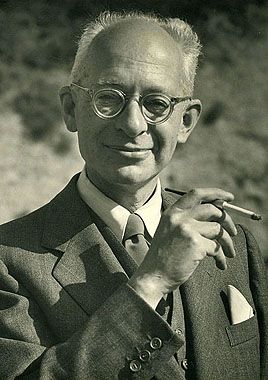
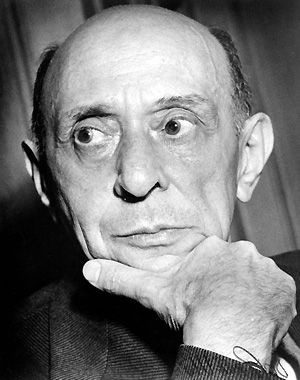

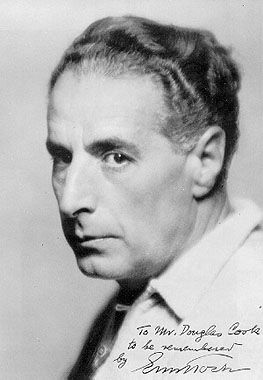
Mario Castelnuovo-Tedesco, Arnold Schoenberg, Nathaniel Shilkret, Ernst Toch
Source: Naxos "Milken Archive" CD (my rip!)
Format: mp3, 320k/s (CBR), DDD Stereo
File SIze: 118 MB (incl. liner notes)
Download Link (re-up) – https://mega.co.nz/#!kQAWzRyC!f25go1r-MjTEwFdhbNOW_yQ-zb8WI8fW4yDegwhsVuM
Enjoy! Don’t share! Buy the original! 🙂
What treasures!
I really appreciate the new Karayev album and the Genesis one. Thanks, wimpel!
I hope you are not really "retiring"…:-)
I guess Mozart Camargo Guarnieri and his brothers Rossine (sic!), Belline, and Verdi Guarnieri got beat up
at school a lot. They must have hated their parents, too. Seriously, who gives their children first names after
the surnames of famous composers? Predictably, when little Mozart grew up to be one of Brazil’s leading 20th
century composers, he shortened his name to M. Camargo Guarnieri; today he’s mostly known simply as Camargo.
He studied piano and composition at the S???o Paulo Conservat???rio, and subsequently worked with Charles Koechlin in
Paris. Some of his compositions received important prizes in the United States in the 1940s, giving Guarnieri the
opportunity of conducting them in New York, Boston, Los Angeles and Chicago. A distinguished figure of the Brazilian
national school, he served in several capacities; conductor of the S???o Paulo Orchestra, member of the Academia
Brasileira de M???sica, and Director of the S???o Paulo Conservat???rio, where he taught composition and orchestral
conducting. In 1936 he was the first conductor of the Coral Paulistano choir. His œuvre comprises symphonies,
concertos, cantatas, two operas, chamber music, many piano pieces, and over fifty can??????es.
Music Composed by M. Camargo Guarnieri
Played by the S???o Paulo Symphony Orchestra
Conducted by John Neschling
"Expect from Guarnieri the same irrepressible energy and joie de vivre that you get from Villa-Lobos,
Ives and Grainger. The two half hour symphonies are each in three movements. The Second Symphony
is not afraid of rough energy (tr 1 and 3) which capriciously fades into reverie as in 3.34 (first movement)
with its woodwind reflection. This work has the vitality of the Americas; the turbulent spirit of creation,
exploration and joy and a jazzy accent in the Festivo finale. Sometimes, as in the Terno second movement,
he draws on Stravinskian models such as the bleak serenades of the Rite. This only provides him with a
launching point from which to let his melodic gift loose (tr 2. 2.15). Villa-Lobos’s symphonic poem and choral
works bearing the same title (Uirapuru – a reference to an Amazonian bird) were written before the
Guarnieri symphony. The Third Symphony is less exotically euphoric than the Second and some might
say that the North American influence had unduly diluted and civilised the Brazilian fantasy and replaced it
with the music of the far Western prairies. Further evidence of this is to be found in the sly and beautifully
turned trumpet solo at 00.31 in the Decidido third movement. The vivo section of the middle movement
is a louche affair with woodwind writing close to Malcolm Arnold.
The Overture is dedicated to Aaron Copland and Copland fingerprints are there to be heard as in the
placid lullaby of 4.38 onwards. It is not difficult to see why Guarnieri’s music appealed to Leonard Bernstein.
The Fourth Symphony Brasilia (1963) is dedicated to Bernstein."
Musicweb
Source: BIS CD (my rip!)
Format: mp3, 320k/s (CBR), DDD Stereo
File Size: 161 MB
Download link (re-up) – https://mega.co.nz/#!YZIzlSwQ!daQTjWImfNlKSHI8EZ5GmymqlZUsNYxkBeh5QUv A4Ho
Enjoy! Don’t share! Buy the original! 🙂
American composer Norman Dello Joio (1913-2008) bridged the gap between contemporary classical music and the
musical public with his works during the mid-twentieth century, when many classical composers were pulling away from
ordinary listeners and writing pieces that took special training to understand. One of the few contemporary composers
who succeeded in making a living at his art with little support from academic or church sources, Dello Joio was a prolific
composer who worked in all the major genres of classical music, including symphony, opera, keyboard music, chamber
music, and ballet. He also wrote for television, films, and student ensembles. What mattered to Dello Joio was that his
music be heard. In the words of his biographer, Thomas A. Bumgardner, Dello Joio "is people-oriented. He considers
himself a working musician whose job is to write pleasurable music that communicates immediately with the listener."
Dello Joio wrote four ballets for the famous dancer/choreographer Martha Graham, of which Diversion
of Angels and Seraphic Dialogues are considered classics. The third one on this album, Exaltation of Larks, composed
in 1978, was never choreographed, as Graham had already retired by that time.
Music Composed by Norman Dello Joio
Played by The Atlantic Sinfonietta
Conducted by Edvard Tchivzhel
"Since its founding in 1989, Koch International Classics has produced several impressive world-premiere recordings
of American works, including Leonard Bernstein’s Arias and Barcarolles, winner of a 1989 Grammy Award. The first
two releases in Koch’s Music for Martha Graham series offered music by Copland, Barber, Menotti, Hindemith, and
Schuman; its third and final volume focuses on a single American composer, Norman Dello Joio (b. 1913).
Dello Joio’s alliance with the grand dame of modern dance began in 1948 when Graham performed his work entitled
Wilderness Stair. The composer soon changed his title to Diversion of Angels, now a classic in the modern dance
world, and eventually rescored the work for full orchestra and named it Serenade for Orchestra. This final version
has received the greatest attention in the musical world, but the crisper chamber scoring, Diversion of Angels, is
featured on this recording.
Dello Joio’s deftness with varying musical languages will be no surprise to his admirers; he integrates bitonality,
quartal sonorities, and modal progressions in a strikingly cohesive and tuneful idiom. Simultaneous major and minor
third degrees infuse the work with a moderate bite, and in the third movement ("Con brio") the device occasionally
reverts to its source, the jazz blue note. The work is perfectly suited to a chamber medium, where individual
interpretation highlights Dello Joio’s characteristic lyricism and limited doubling enhances his keen sense of
timbral contrast. John Van Buskirk renders the featured piano part with great panache.
The composer plainly stated his approach to choreographed works in a 1963 interview with Dance Perspectives
magazine: "I dislike the type of music that fills in background or marks time in order for the dancer to make the
necessary steps." In all three featured works, Dello Joio satisfies the musician and dancer alike with music that
derives purpose from itself. Perhaps best known of the CD’s selections is Seraphic Dialogue (1955), which first
appeared as the 1950 opera The Triumph of Saint Joan. The composer withdrew that form after one performance,
only to fulfill a commission from the Louisville Orchestra the next year with the dance work, The Triumph of
Saint Joan Symphony, premiered by Graham herself. Finally, Dello Joio rescored the work for the instrumentation
heard on the Koch release and dubbed it Seraphic Dialogue, the work dancers consider part of the Graham canon.
The third work, Exaltation of Larks (1978), was also renamed–this time to Lyric Dances. Graham never performed
the dance work herself, although Dello Joio’s intention was to the contrary. From the pensive, mildly quartal onset
through the twittery "giocoso" finale, the two-movement work evokes thoughts of the birds and their music.
One hopes Koch’s release of this little treasure will foster a renewed interest in Dello Joio’s works among choreographers.
American Music
Source: Koch International CD (my rip!)
Format: mp3, 320k/s (CBR), DDD Stereo
File Size: 108 MB (incl. covers, booklet)
Download Link (re-up) – https://mega.co.nz/#!UV5UEQbY!IbQlxBwDLQElllf33S267DwRXgQhqfezW-7tsO5-oKE
Enjoy! Don’t share! Buy the original! 🙂
As a candidate for the pantheon of tragic cult figures, Silvestre Revueltas was as perfect as they come. At his
death in 1940 the composer had left a substantial body of revolutionary work, kept many personal details of his
life obscured, lived hard and died young in poverty. So perhaps we can look the other way if his work has long
been overshadowed by the legend. The common perception at mid-century, expressed by no less a figure
than Leonard Bernstein, was that Revueltas might have been a great composer “had he lived” – a position later
attacked by composer Peter Garland as being valid only for people who know his entire body of work in the first
place. In a quite literal sense, Revueltas’s art was revolutionary.
This is no more apparent than in his ballet La Coronela. Written for the choreographer Waldeen (the
single-named pioneer of Mexican modern dance), La Coronela follows a scenario of skeleton figures by the
Mexican engraver Jos??? Guadalupe Posade depicting the overthrow of the decadent bourgeois by the working
class, a theme dear to Revueltas’s heart. Following the composer’s death from bronchial pneumonia, the
unfinished work was turned over to the composer Bas Galindo to compose and Candelario Hu???zar to
orchestrate. The premi???re went on as scheduled on 23rd November, 1940, at Mexico City’s Palacio de Bellas
Artes.
The other pieces on this recording Itinerarios (Travel Diary) and Colorines showcase the beginning
and end of Revueltas’s most fertile creative period. Itinenarios (1938), one of the composer’s most solemn
works, is less rhythmically inventive than his more radical pieces, though even its intense lyricism
maintains a rhythmic function. Colorines (1932), a symphonic poem for chamber orchestra, reveals a fully
developed voice even in Revueltas’s earliest orchestral works.
liner notes
Music Composed by Silvestre Revueltas
Played by the Santa Barbara Symphony & English Chamber Orchestras
Conducted by Gis???le Ben-Dor
"In a composing career which spanned about 16 years Revueltas left a large body of work in all genres except
opera. His music gets right to the point immediately; there’s never a note wasted, and he speaks the Mexican
vernacular. Paul Bowles called him “The Mexican Falla” but his music is far too Rabelaisian for that. Falla was
fastidious in everything he wrote. Revueltas is manic; one feels that he barely has time to get one idea on
paper before another comes into his mind that must be used. It’s easy to see why he has been compared to
Charles Ives for, at first hearing, one might think that here is someone who has little idea as to what he is
doing. Further knowledge of the music – and this is also true of Ives – shows a strong hand and a strong
musical mind at work.
Colorines, the earliest work here, is scored for a small orchestra and is full of Indian drumming, bird-calls, screams
might be a better word, and it sings of the country villages and their people. You can hear all the subsequent
cowboy film scores here, but this is the real thing, not an ersatz Mexico. Itinerarios is more serious. Huge chords
for full orchestra lead to a saxophone lament, with the chords now reduced for a few instruments. Quite how the
title relates to the music is beyond me, but that isn’t really important for here is a landscape, empty of people,
which has a surprising ending considering what has gone before.
La Coronela is the most important piece here. The notes, in the inlay, give the full story so I won’t dwell on it here
beyond pointing out that it is a ballet involving skeleton characters based on the engravings of Jos??? Guadalupe
Posada and a revolutionary plot around the theme of a workers’ coup against an oppressive r???gime. The work is in
four episodes: Society Lady of Those Times; The Disinherited; Don Ferruccio’s Nightmare; The Last Judgement.
Left incomplete when Revueltas died the first realisation fell to Blas Galindo with orchestration by Candelario Huizar.
This was premiered in Mexico City in 1940 after which the score promptly disappeared. The ballet is heard here in
an edition by Eduardo Hern???ndez Moncada (who had conducted the 1940 premiere) and Jos??? Limantour. Limantour
conducted the premiere of this version in 1962 in Mexico City. It’s a very exciting piece, having all the usual
Revueltas fingerprints and it leaves you wanting more.
This is a fabulous disk, well worth having for the marvellous music it contains and the fact that here is a true wild
card of music. Good notes, great sound. The sheer earthiness of this music is compelling, which makes it all
the more fascinating that Revueltas’s attractive music should still be looking for an audience."
Music Web
Source: Naxos CD (my rip!)
Format: mp3, 320k/s (CBR), DDD Stereo
File Size: 108 MB (incl.cover, booklet)
Download Link (re-up) – https://mega.co.nz/#!EMoEmYqA!dvoU9loRddBnF5N6-jSiQU5-CWBC0MCVJfGi36m39zA
Enjoy! Don’t share! Buy the original! 🙂
Tomorrow, I’ll start early with the downloads.
Once more, thank you!
———- Post added at 11:06 AM ———- Previous post was at 11:00 AM ———-
I love this other Mozart!
Thanks, wimpel!
This new recording of orchestral music by Jean Fran???aix – personification of the elegant and witty French ‘salon’ ambience –
brings us two ballets scores and the Concertino for piano and orchestra, one of the composer’s earliest successes, still one
of his best-known compositions, and itself a model of the pithy-yet-polished style Fran???aix has so come to represent.
The main work on this disc is the ballet score Les malheurs de Sophie, a setting of the eponymous French children’s
tale of a naughty little girl, her escapades and misadventures. In three tableaux, Fran???aix’s score admirably encapsulates the
capricious spirit of Sophie as she variously cuts up (and eats) her mother’s goldfish, holds a funeral for a favourite doll,
shaves off her eyebrows … All in all the perfect subject-matter for the composer’s own brand of genial invention.
Although the suite for wind ensemble the composer subsequently prepared has become something of a repertoire piece,
the original orchestral score has remained frustratingly obscure until now. Les bosquets de Cyth???re (‘The groves of Cythera’)
is Fran???aix’s development of a tradition which saw composers and poets from Debussy and Poulenc to Watteau
and Boucher immortalizing the Bacchanalian, even Priapic, delights of this ‘island of love’. In his updated fantasy
world abandoned shepherdesses lie quite happily with the minxes from the notorious Parisian restaurant Chez Maxim
and all is couched in an ironic style charmingly blending the manners of a Couperin with those of the Roaring Twenties.
Music Composed by Jean Francaix
Played by the Ulster Orchestra
With Philippe Cassard (piano)
Conducted by Thierry Fischer
"What’s not to like? The ballet Les malheurs de Sophie perfectly suits Jean Fran???aix’s insouciant style, with a plot that
concerns the misadventures of a little girl and her mother’s futile attempts to persuade her to behave. The music is child-like
without ever becoming childish, full of fun and wit, and conductor Thierry Fischer captures its vivacious charm as well as we
have any right to expect–aided in no small degree by the crisp response of the Ulster Orchestra. Philippe Cassard offers similar
qualities of appealing lightness as soloist in the delightful Concertino for piano and orchestra, while Les bosquets de Cyth???re
(not officially designated a ballet but certainly danceable) neatly combines the Viennese waltz with touches of jazz. Music so
agreeably appealing needs no further comment from me, and when the performances are as idiomatic and perky as these,
captured in such fine sound, the disc becomes self-recommending. Good clean fun!"
Classics Today http://i1084.photobucket.com/albums/j415/wimpel69/p9s9-1.gif
Source: Hyperion CD (my rip!)
Format: mp3, 320k/s (CBR), DDD Stereo
File Size: 131 MB
Download Link (re-up) – https://mega.co.nz/#!VR51wZqR!X-FsizO1klSJtcC07vRsRmbgyeY5mXDKgU3MA-eg-vg
Enjoy! Don’t share! Buy the original! 🙂
———- Post added at 09:38 AM ———- Previous post was at 08:51 AM ———-
No.155
Vox maris is a symphonic poem finished around 1954, by the Romanian composer George Enescu.
The poem is scored for a large orchestra—quadruple woodwind, six horns, four trumpets, three trombones, tuba,
timpani, five percussionists, two harps, piano and strings—with an off-stage choir of sopranos, altos and tenors
(no basses) and a tenor soloist, ‘the voice of sailor’. Essentially, Vox maris is a large scale, three-movement-in-one
symphony, anchored to G major—but not so firmly as to preclude (almost as we can expect) a fluid tonal basis.
The second part of Vox maris begins with a calmer mood but soon starts rising in tone. Enescu exerts tonal control by
rising by semitones; the climax is itself centered upon G—as though the very depths of ocean are moved by the powerfu
l forces of the nature—and at the summit the choir, making its first entry, cries out in despair, with four thunderous
crashes from double timpani. The voice of the sailor calls for boat to be launched, but again the chorus cried out, more
fearfully and tragically, as they seem to be engulfed by the forces around them, literally so as a lone soprano cries
‘Miserere, Domine!’ before the wind machines blow across the texture for the first time.
The image fades, and the music gradually, but quite soon, becomes calmer at the same time as retaining its essential fluidity.
The storm has passed but the human voices have more than suggested some fearful event has occurred. The tonality
now lands on G sharp—so near, and yet so far—as the last great part begins. It is as if the lower voices intone a
blurred requiem, made more mysterious in an extraordinary passage for wordless female voices, solo strings, piano,
celeste and percussion: a fabric of diffused colour and light, which tonally now falls to G minor. A shaft of light brings
a falsely-related G, a little uncertainly, at last, into which quietly deep region the music descends, across no less than
five percussion players to the lowest orchestral of all—the bass of the piano.
The exact dates during which Enescu worked on Voix de la nature composition remain uncertain, but it has a
certain stylistic affinity with the other works which emerged from his stable in the years leading up to the Second World War.
Only part of a single movement survives, entitled ‘Nuages d’automne sur les for???ts’. That this might have been intended
as a cycle of pastorally-inspired tone poems is supported by the existence of another sketch titled ‘Soleil dans les plaines’,
apparently dating from the same period. Voix de la Nature, as it remains extant, is scored for a small orchestra with a
group of string soloists. It is too small a work on which to make any objective judgement but from a subjective standpoint
it is a pity Enescu did not pursue the cycle idea.
Music Composed by George Enescu
Played by the "George Enescu" Bucharest Philharmonic Orchestra & Choir
With Florin Diaconescu (tenor)
Conducted by Cristian Mandeal
"George Enescu (1881–1955) is considered by many who know his music to be one of the least-known great composers
of the 20th century. The reasons for this are multiple and complex. He was one of the most versatile musical talents of his time;
and, while he may have made his most significant mark as a violinist, he was also an accomplished pianist, conductor, and teacher.
Certainly, these other activities detracted attention from his work as a composer. The huge success of his early Romanian
Rhapsodies was a mixed blessing: he always felt they overshadowed his more serious, more characteristic music. He was a native
of rural Romania who studied in Vienna and Paris, where he settled. While it shows various distinct influences, his music defies
categorization. Perhaps it is this last aspect of his art that posterity has found most difficult: as illustrated by the works on this
CD, his musical language evolved from a Romanian-accented French to something more like a French-accented Romanian. His
affinity for French musics, encompassing Debussy’s influence as well as Franck’s, along with his lifelong connection to the music
of his native country, results in a sound (or, better, sounds) unlike that of any other composer; the closest parallel I can
suggest is that of Szymanowski, who likewise has never quite broken into the “basic repertoire.”
The three works on this disc represent the earliest and latest periods of Enescu’s career as a composer. The Romanian Poem
was first performed in 1898; Vox maris, or “Voice of the Sea,” was written in the 1920s, although he may have tinkered
with it for years thereafter. The movement of Voix de la nature given here, written in the 1930s, is the only one of three
to have been completed.
The titles of these pieces tell us much about their musical content. Enescu referred to op. 1, a “Symphonic Suite,” as
describing “the distant impression of familiar images of home.” The work is explicitly programmatic, even narrative:
without difficulty one can hear church bells, chanting priests, a shepherd’s pipe, a cock crowing, and so forth. The
second part includes a folk-like passage that unmistakably prefigures the Romanian Rhapsodies. The ending, based
on the Romanian national anthem, is reminiscent of Liszt; other passages remind the listener of the Debussy of
Printemps as well as such composers as Dukas and Magnard. Enescu’s early flair for orchestral color is augmented
by the use of a wordless male choir.
Vox maris is also narrative music, depicting the experience of a sailor who drowns in a storm, followed by calm and
the voice of the Sirens. It is impossible not to recognize the influence of La mer, yet the music could not have been
written by Debussy any more than it could by any other composer besides Enescu. In all three pieces Enescu displays
a singular musical voice with a flair for atmosphere and, in the later works, a stylized treatment of tonality that is
highly chromatic without ever threatening to abandon tonality altogether. If the music has any fault, it may be the
lack of a distinctive melodic profile; in any event, it is music that demands careful and repeated listening.
This disc may be a good choice for listeners interested in experimenting with the music of this challenging
but intriguing composer."
Fanfare
Source: Arte Nova CD (my rip!)
Format: mp3, 320k/s (CBR), DDD Stereo
File Size: 142 MB
Download Link (re-up) – https://mega.co.nz/#!tFwiVKbZ!MdDaYVc-PvRMRB7jZJZuJGkJd5wliXV3Wuz–QWOkkw
Enjoy! Don’t share! Buy the original! 🙂
Written in 1951– 2, The Apocalypse was premiered by the conductor Victor de Sabata, who had
commissioned the work, and the Philadelphia Orchestra; an earlier performance with the Pittsburgh Symphony
Orchestra had presented two of the work’s three movements. Gian Carlo Menotti, best known for
his many successful operas (The Consul, Amahl and the Night Visitors, The Telephone, etc) describes
the piece as "a synthesis of the vast body of Jewish and Christian writings on the subject of the
apocalypse. Most people know only of the description of the apocalypse in the Revelations
of St John, but there are numerous different accounts, mostly in poetry. These writings are
highly rhapsodic and emotive in their figures of speech and narrative content."
The different movements depict three kinds of apocalypse. The first movement, ‘Improperia’,
has the largest and most complex structure, opening with ominous fanfares which herald the
diabolical energy of a section marked Allegro giocoso ma non troppo. The fanfares return at key moments
throughout the movement. The second movement, ‘La citt??? celeste’, presents a complete contrast
of mood and musical structure. Menotti was inspired by the imagery of an extended passage in
Revelations which speaks of the beauty of the new, post-apocalyptic Jerusalem. The third movement,
in a radiant F major, which culminates in an almost obsessive repetition of its one and only theme, is
as static as the first movement is dramatic. The incessant circling of the main melody is a musical
metaphor for an image Menotti found in another description of the apocalypse, of a heavenly kingdom
suspended in mid-air.
Norman Dello Joio’s Meditations on Ecclesiastes, scored for string orchestra, was premiered
as a ballet in 1956 and won the Pulitzer Prize in Music for best new work the following year.
It is a gentle set of variations with only very limited extra-musical inspiration. The third work,
Ronald LoPrest’s The Masks, was composed in 1955 as a two movement orchestral suite that
was part of the American Composers’ Edition series produced by Eastman in conjunction with
Carl Fischer music publishers. Lo Presti, a student of Howard Hanson is perhaps best known for
his Elegy for a Young American written for concert band. Indeed, The Masks is reminiscent
of the Elegy in its romantic style with rich contemporary harmonies.
Music by Gian Carlo Menotti, Norman Dello Joio & Ronald LoPresti
Played by The Oregon Symphony
Conducted by James DePreist
"This is an interesting collection. All the music here was composed in the 1950s, but there doesn’t seem
to be much else that unifies them – they are all well performed, however. Apocalypse was Giancarlo Menotti’s
first orchestral work, and it is in many senses a strange one – it is weirdly unbalanced (the first movement is
longer than the other two combined), and there is little connection between the movements apart from a
certain personal touch. It is nevertheless a fascinating, slightly eerie and otherworldly but often deeply beautiful
piece with plenty of fine themes, atmosphere and color, and it is well scored. The tunes themselves suggest
light music, and the atmosphere is easily romantic, but this is not a work without substance, and it is
definitely a work worth exploring.
Ronald LoPresti (1933-1986) is the least known composer here. Furthermore, The Masks is a student work, and
I have really no idea how representative it is of his output. The most obvious stylistic influence is perhaps
Hindemith, but the music has a certain Barberesque quality to it as well. I cannot say that it is a particularly
memorable work, but at least the vigorous parts are enjoyable enough. The Meditations on Ecclesiastes remains
Dello Joio’s most famous work (he also got the Pulitzer Price for it). Written as a ballet, the work is scored for
string orchestra, which Dello Joio employs to color and illustrate various aspects of the Biblical story, and if the
end result is occasionally a little dry it is surely an inventive work with plenty of good ideas put together with
skill and ingenuity. It is all very well played by the Oregon Symphony Orchestra under James DePreist, and
overall this is a rather fascinating collection, well worth checking out."
Amazon Reviewer
Source: Koch International CD (my rip!)
Format: mp3, 320k/s (CBR), DDD Stereo
File Size: 125 MB
Download Link (re-up) – https://mega.co.nz/#!8IgCiCaA!O8j7VRzmHljoSNwMSuceTW60aytDvp9W-V97ZVOW_x0
Enjoy! Don’t share! Buy the original! 🙂
Hakon B???rresen’s Symphony No.2 ("The Sea") is written in a style not far away from Mendelssohn, Dvor???k and Schumann
but with Tchaikovskian moments. This is firmly rooted in the 19th century so you must not despite the evocative movement
titles (Surf, Tragedy etc) expect romantic impressionism. This is more in the nature of Rubinstein’s Ocean Symphony.
It’s still invigorating stuff, especially in a performance as brisk and lively as this one. The noble yet half submissive big theme
is memorable and returns in the finale. The second movement is taken at a smart clip with shades of Mendelssohn’s
Midsummer Night’s Dream and a Brucknerian woodland magic. There is a grave slow movement (Tragedy) which is more
head-bowed than fist shaking. The last movement returns to the Tchaikovskian and Mendelssohnian atmosphere.
B???rresen’s Third Symphony was written some nineteen years after his Sea Symphony. It is more mature, less outgoing,
deeper and more hesitant. The long opening movement begins darkly and is an intensely personal statement. The inner movements
are quite short: the Adagio is rather Gothic in parts, at other times it is romantically dramatic.
Music Composed by Hakon B???rresen
Played by the Frankfurt Radio Symphony Orchestra
Conducted by Ole Schmidt
"B???rresen’s father was Norwegian, and B???rresen himself was an imposing figure, over six foot seven tall. His music, too, gives an
impression of mountainous, immovable nature. Hakon B???rresen’s music has a majestic quality with its light-filled, muscular ambience.
The orchestral music is very well arranged, carrying on the tradition of B???rresen’s mentor Johan Svendsen. B???rresen composed
three symphonies and one of the best Danish violin concertos, as well as excellent theatre and ballet music. His chamber opera
Den kongelige G???st (The Royal Guest) is one of the most frequently performed Danish operas at all, while his string sextet has
once more found a place in the Danish repertoire. Hakon B???rresen was a conservative, and never abandoned his fin-de-si???cle cultural
roots, although he survived practically all his like-minded, Romantically inclined colleagues in Danish music. As organizational
chairman of the Danish composers he spent much of his time on administrative tasks, and his last years were neither
particularly productive nor happy."
DaCapo
http://i1084.photobucket.com/albums/j415/wimpel69/borresen.gif
Source: CPO CD (my rip!)
Format: mp3, 320k/s (CBR), DDD Stereo
File Size: 148 MB
Download Link (re-up) – https://mega.co.nz/#!oQomVYJa!OZu0NSGXWoSkWjktD0jvWRrcnUUaxaPHg5L60z1 tfPU
Enjoy! Don’t share! Buy the original! 🙂
Dmitri Shostakovich’s Eleventh Symphony ("The Year 1905") is sometimes dubbed "a film score without the film".
The title of the symphony is a reference to the failed first attempt at a revolution in Russia in January of 1905.
The musical images are indeed of an immediacy and simplicity unusual even for Shostakovich the epic symphonist, and an
additional thread is provided by the nine revolutionary songs which appear during the work. Some of these songs date back
to the 19th century, others to the year 1905. Shostakovich does not merely quote these songs; he integrates them into
the symphonic fabric within the bounds of his compositional style. This use of pseudo-folk material was a marked departure
from his usual technique. However, it lent the symphony a strong emphasis on tonality and a generally accessible musical idiom.
It consists of four movements:
I. The Palace Square: The first movement is cold, quiet, and somewhat menacing, with transparent strings and distant
though ominous timpani motifs. This is underscored with brass calls, also as though from a great distance.
II. The Ninth of January: The second movement, referring to the events of the "Bloody Sunday", consists of two major
#sections. The first section probably depicts the petitioners of 22 January 1905 [O.S. 9 January], in the city of Saint Petersburg,
in which crowds descended on the Winter Palace to complain about the government’s increased inefficiency, corruption, and
harsh ways. This first section is busy and constantly moves forward. It builds to two steep climaxes, then recedes into a
deep, frozen calm in the prolonged piccolo and flute melodies, underscored again with distant brass. Another full orchestra
buildup launches into a pounding march, in a burst from the snare drum like gunfire and fugal strings, as the troops descend
on the crowd. This breaks out into an intense section of relentless strings, and trombone and tuba glissandos procure a
nauseating sound underneath the panic and the troops’ advance on the crowd. Then comes a section of mechanical,
heavily repetitive snare drum, bass drum, timpani, and tam-tam solo before the entire percussion sections breaks off at once.
Numbness sets in with a section reminiscent of the first movement.
III. Eternal Memory: The third movement is a lament on the violence, based on the revolutionary funeral march
"You Fell as Victims". Toward the end, there is one more outbreak, where material from the second movement is represented.
IV. Tocsin: The finale begins with a march, (again repeating material from the climax of the second movement), which
reaches a violent climax, followed by a return to the quietness of the opening of the symphony, introducing a haunting cor
anglais melody. After the extended solo, the bass clarinet returns to the earlier violence, and the orchestra launches into a
march once again. The march builds to a climax with snare drum and chimes in which the tocsin (alarm bell or warning bell)
rings out in a resilient G minor, while the orchestra insists a G major. In the end, neither party wins, as the last full orchestra
measure is a sustained G natural, anticipating the future events of 1917.
Wikipedia, et al
Music Composed by Dmitri Shostakovich
Played by the G???rzenich-Orchester Cologne Philharmonic
Conducted by Dmitrij Kitajenko
"When this cycle of the symphonies of Shostakovich with Dmitri Kitajenko conducting the G???rzenich-Orchester K???ln
was released in 2005, Shostakovich cycles were no longer the novelties they had been in the latter years of the
twentieth century. There were already several superlative cycles in circulation — the monumental Kondrashin,
the modernist Rozhdestvensky, the anguished Barshai — and a pair of superlative cycles nearing completion —
the commanding Jansons and the compelling Gergiev — when the Kitajenko — K???ln cycle was issued on Capriccio
in superaudio sound. Listeners who knew Kitajenko only from his recordings made before the collapse of Communism
for Melodiya were caught off guard by his complete mastery of the music, of his grasp of its every nuance of
heroism and subtlety of irony, of his understanding of its gradations between pathos and bathos, of his control
over its most desiccated melody and its most crushing sonority. Listeners who knew the G???rzenich-Orchester K???ln
from its tremendous recordings with Wand and Conlon were not so much surprised as pleased to hear the orchestra
sound so splendid here. The power of its tone, the brilliance of its colors, the strength of the rhythms, and the
depth of its commitment proved no less than the finest orchestras of the former USSR. While longtime Shostakovich
listeners were amazed, they found that in the Kitajenko/K???ln cycle they had a cycle in the same league as the best
that had heretofore been released. Made during the early days of superaudio sound, Capriccio’s sound is incredibly
lifelike; when it was released, listeners were stunned by the delicacy of the bells and staggered by the
immediacy of the tympani."
All Music (on the Kitajenko Shosty cycle)

The stand-off between peaceful demonstrators and the
Tsarist army on "Bloody Sunday", 1905.
Source: Capriccio SACD (my rip, 2-channel stereo)
Format: mp3, 320k/s (CBR), DDD Stereo
File Size: 138 MB
Download Link (re-up) – https://mega.co.nz/#!JJAmnSRb!B4oaFVBU5IaTmeFGkz_yYz4UJccygmqpgr161Ic _lcg
Enjoy! Don’t share! Buy the original! 🙂
The Music of Dawn was commissioned by Unilever for the Young Musicians’ Symphony Orchestra which
gave the first performance of it under James Blair at the Royal Festival Hall, London in November 1990. In June
1989 I had gone to the retrospective exhibition of paintings by Cecil Collins at the Tate Gallery. I was
particularly struck by the painting called The Music of Dawn. A priestess stands on the seashore, in soft dawn
light, her right hand pointing away to the sun rising out of the sea. It is painted in tempera, and the colours
are warm and glowing. It immediately suggested music, as, from its title, it was obviously intended to do.
Cecil Collins was the most musical of painters, and I hope that he would have liked the idea of his painting
being evoked in the medium of orchestral sound.
A Vision and a Journey was composed between July 1992 and March 1993 to a BBC commission and first
performed in October 1993 at the Royal Northern College of Music, Manchester by the BBC Philharmonic conducted
by Yan Pascal Tortelier. I became dissatisfied with certain features of its shape, so between 1996 and 1999 I
undertook a large-scale revision. I called the piece ‘symphonic fantasy’, which links it in my mind with another
piece about a journey, Sibelius’s Pohjola’s Daughter. The title A Vision and a Journey indicates the
two kinds of music that are integral to the piece. I imagined a journey, perhaps across some wide, open space,
which at several points would be redirected after.
David Matthews
Music Composed by David Matthews
Played by the BBC Philharmonic Orchestra
With Guy Johnston (cello)
Conducted by Rumon Gamba
"David Matthews is a composer of some renown who writes music that is engaging and accessible,
in the best sense of the word. However, after being enthralled at the opening of The Music of Dawn
I felt letdown when he seemed unable to sustain the initial promise of the opening material. In general
I think this may be a problem of this composer, for his ideas, often pregnant with an immediate appeal,
falter as time progresses. I kept waiting for something spectacular to happen, but the end result was a
sort of stasis whereby ideas were churning but not developing. Nonetheless, the first 15 minutes are
quite interesting, pictorial and highly visual in nature.
The Concerto in Azzurro seems to capture the composer’s imagination and technical facility with more
comprehension and expressiveness. Perhaps it is the continual dialogue between cello and orchestra that
makes for a more intellectual and consequently emotional connection with the listener. Or perhaps it is
just the idea of the Isle of Lindy in the Bristol Channel rising from the blue sea that keeps the forward
momentum going, but this is a capital concerto with much to offer both from the obvious concerto-like
elements and the more impressionistic tone poem elements of the work.
Maybe the shorter A Vision and a Journey kept the composer from wandering too much in his thoughts
the way he does in The Music of Dawn—it is hard to say. But I found the fantasy elements of this work to
be especially appealing, and Matthews moves consistently across the various emotive sections with great
fluency and adeptness. Those of you who enjoy the full frontal use of the symphony orchestra, particularly
the brass section, will find much to admire in this and all of these works. This is generally a fine effort,
and a composer to respect and enjoy. The sound and playing are vivid and fully realized –
surely definitive recordings."
Audaud.com
Source: Chandos CD (my rip!)
Format: mp3, 320k/s (CBR), DDD Stereo
File Size: 200 MB (incl. cover, booklet)
Download Link (re-up) – https://mega.co.nz/#!4colyZLY!PFkFBFgRiXjalk2Pz2uIpFjl2rpNL8Uv3m40wOd 23bk
Enjoy! Don’t share! Buy the original! 😉
The music on the present disc provides a vivid overview of the rise of diverse
compositional styles, all with distinctive national characteristics, in four South
American countries during the early to midtwentieth century. In addition to their creative
applications of elements borrowed from, or inspired by, folk music and dances from their
native countries, our selected composers from Argentina, Brazil, Colombia, and Peru all
owed an immense debt to French and Italian influences absorbed during their first-hand
experiences of studying at prestigious conservatories in (for example) Paris and Milan
in the early stages of their careers.
Astor Piazzolla’s littleknown Milong???n festivo, originally scored
for piano, three bandone???n, electric guitar, and orchestra and taking its title from a
Uruguayan dance, was rescued from oblivion by Piazzolla’s long-term collaborator Jos???
Bragato, who copied out the full orchestral score in 1990 and gave it to his friend,
the bandone???n player Juan Jos??? Mosalini (who first recorded it in a version for solo
bandone???n, guitar, and orchestra).
As well as a composer, educationalist, and (in later life) the leading light of a vocal
ensemble formed from his large musical family, Manuel G???mez Carrillo (1883 – 1968)
was important as an ethnomusicologist who, in 1920 and 1923, published two books
of arrangements of folk melodies he had collected in Northern Argentina. His Rapsodia
santiague???a was named after Santiago del Estero, where he was born and worked until
his eventual move to Buenos Aires in 1943. The piece was first performed in solo-piano form
in September 1920 at the Society Sarmiento de Tucum???n (where the local university had
sponsored his folk project). The piano piece was championed by the French pianist
Maurice Dumesnil, who took it to Paris where it was performed in orchestral form at the
Conservatoire in February 1924 under the baton of Francis Casadesus.
G???mez Carrillo’s Fiesta criolla (Creole Party) also began life as a set of piano pieces, and
was first performed in this guise in 1934 by the composer’s daughter In???s; it, too, proudly
indicated its local source of inspiration in the subtitle Panorama inspirado en motivos
santiague???os. The orchestrated version was first performed in 1941.
Some of the music by Theodoro Valc???rcel Caballero (1896 – 1942) is conceptually similar
to the manner in which, in northern Europe, composers such as Ralph Vaughan Williams
evocatively combined modal folksongs with Debussyan elements. This comparison is
particularly plausible in the case of Valc???rcel Caballero’s highly tuneful violin concerto
Concierto indio, based largely on modal melodies and completed in 1940, shortly
before the composer’s early death.
Congada by Francisco Mignone (1897 – 1986) is subtitled
"Dansa afrobrasileira", and was one of the first of his orchestral pieces to demonstrate these
more exotic elements at a time when his spell in Milan had more generally imbued his
compositional voice with a strong Italianate flavour. (Mignone’s flautist father was an
Italian immigrant.) Congada was a popular orchestral extract from the three-act opera
O contratador de diamantes.
Music by Astor Piazzolla, Manuel G???mez Carillo, Juan Jos??? Castor,
Theodoro Valcarel Caballero, Francisco Mignone, Guillermo Uribe Holguin & Alberto Williams
Played by the W???rttembergische Philharmonie Reutlingen
With Nora Chastain (violin)
Conducted by Gabriel Castagna
"The programme was selected from the opuses of seven South American composers active during the early
to mid- twentieth century, and representing their respective countries of Argentina, Columbia, Brazil and Peru.
While the music embodies creative elements borrowed from or inspired by native folk music, it also reflects the
Italian and French influence absorbed during the periods of study and inculcation at prestigious conservatories
in such places as Paris and Milan (see composer notes at the end of review).
Gabriel Castagna writes and conducts with missionary zeal. He laments the large number of Latin-American
orchestral compositions that have suffered neglect and are awaiting rediscovery. Considering Indian themes,
and subjects of the Andean region alone, more than 250 works can be identified: operas, ballets, cantatas,
overtures, symphonic poems, rhapsodies, concertos and symphonies. Almost none is recorded or played
regularly. In many cases scores have been lost or abandoned.
During many years of research, Castagna has amassed hundreds of scores by over 250 different Latin American
composers, active during the last one and a half centuries. Collectively the symphonic literature of Latin-America
over that period is surprisingly large. Quality may vary, but much is unquestionably of artistic value. Castagna
describes the music presented as a fusion of ethnicities, religions, traditions, styles and legends and all kinds
of other conflicting centrifugal forces that render its biggest virtue uniqueness, and at the same time its biggest
artistic challenge. Also noted is the influence that the spirit of the dance has in a large number of Latin-American
compositions of academic tradition.
Castagna highlights the role of misleadingly bad reviews of bad performance in undermining the genre’s reputation.
These are often a result of application of fixed parameters, suitable for analysis of standard European repertory.
Further exacerbating this is insufficient interest on the part of official institutions to support the culture
of their own nations.
Argentinean conductor and musicologist Gabriel Castagna began his studies in Buenos Aires. He then studied in
the USA and took master-classes with Leonard Bernstein, Sergiu Celibidache and Max Rudolf. It is evident from
his performance on this CD and contributions to the liner-notes, that Castagna is a man with a mission. This is
not his only premier recording of Latin American composers. In 2008 his book and CD entitled Argentina Sinfonica
was also published. He is well qualified to construct a programme of superior Latin American symphonic music by
its premier composers. Despite lack of familiarity with much of the work, these qualities are quickly identifiable
by the astute listener.
This CD implies that a treasure trove of undiscovered, quality symphonic music resides in the opus of
Latin-American composers of the past one and fifty years. It explores only a minuscule part, albeit it in
a highly musical and well-recorded way."
Music Web
Source: Chandos CD (my rip!)
Format: mp3, 320k/s (CBR), DDD Stereo
File Size: 190 MB (incl. cover, booklet)
Downoad Link (re-up) – https://mega.co.nz/#!cNAHUK7T!EvxW1Db5LUGxATgRr2UpI3zg_nw5SlGvzimMDJ4 AYqM
Enjoy! Don’t share! Buy the original! 🙂
———- Post added at 07:37 PM ———- Previous post was at 07:35 PM ———-
I’ll be AFK for a few days, so you’ll be able to catch up. 😉
What great fun!!!
THANKS, wimpel!
please do not take my own (and perhaps other people’s) lack of response as a sign of disinterest. The abundance of new and unfamiliar music you introduce is absolutely overwhelming. It is hard to say thanks with a stuffed mouth, so to say.
However, if you don’t mind, I would surely welcome you taking a break for a while, just in order for me to catch up to the ever expanding queue that is the result of both your generous sharing and the limitations of Depositfiles . But by all means: Don’t stop and please continue to educate me in future.
Jes???s Ar???mbarri is a significant figure in the history of twentieth-century Basque music. A romantic, scholarly
and sensitive musician of extraordinary insight and finesse, he drew not only on the tradition established by
Felipe Pedrell, Manuel de Falla and Isaac Alb???niz, but also on the work of his fellow Basque composers Jos???
Mar???a Usandizaga, Jes???s Guridi and Father Jos??? Antonio de Donostia. Although his fame rests primarily
on his work as a conductor, he also composed a series of stylish and expressive pieces, earning him a rightful
place of honour within the ranks of Basque composers.
Ar???mbarri’s sound academic background, his feeling for the folk-music of his native region and his
ability to give form and colour to any kind of musical image, enabled him to create music characterized by its
elegance and restrained Romanticism, with celebratory as well as dramatic and sombre resonances in his tribute
pieces. He excelled above all in orchestral writing and had a sharp sense of the practicalities of performance,
acquired through his long experience of conducting other people’s works.
The Eight Basque Songs, taken from love-songs and lullabies collected by Resurrecci???n Mar???a de Azcue
and Padre Donostia, show Ar???mbarri’s development as a composer. The influence of Falla’s Siete canciones
populares espa???olas can be discerned, although Ar???mbarri’s treatment is very different. Rather than
transforming the songs into anything more sophisticated, he allows them to speak for themselves,
with the accompaniment of gentle rhythms and subtle, velvety strings.
Although the Fantasia espa???ola – Ar???mbarri’s contribution to the Parisian trend for Spanish-flavoured
pieces – is not lacking in the colours traditionally associated with that country’s music, castanets
included, the composer did not strictly adhere to the idea held in Paris of “Spanish atmosphere”. Once again
his preference for isolating the melodies and entrusting them to the more lyrical instruments (the oboes among
the wind, and cellos among the strings) is evident, giving the “local colour” motifs derived from the
tonadilla and the seguidilla a different treatment.
liner notes
Music Composed by Jes???s Ar???mbarri
Played by the Bilbao Symphony Orchestra
With Itxaro Mentxaka (soprano)
Conducted by Juan Jos??? Mena
"Ar???mbarri is best known as a conductor but this disc of his own compositions is an absolute peach.
Following on from the Naxos Guridi disc, this confirms what a great and rich musical heritage the peoples
of the Basque lands, straddling France and Spain, have to bring to us. Much of the music here reminds
me more of the former than the latter, with the lighter Milhaud a particularly significant comparator for
the folk-based suites. This whole disc is absolutely compulsive as far as this listener is concerned, a
superbly chosen cross-section of the composer’s output. The elegiac tributes to Falla (Offrenda) and
de Gort???zar (In Memoriam) are truly heartfelt and, in the latter, the quote from one of Guridi’s best
pieces (Asi canatan los chicos) is both highly touching and very appropriate.
The opening Preludio is a wonderfully infectious piece, rooted in the composer’s native folk music
(itself displaying a close kinship with Breton and other Celtic musics), and very similar, in spirit, to
Milhaud’s musical tribute to his own folk memory (that of Provence). It’s galloping finale exhibits a real
joie de vie, somewhat at odds with the subtitle Witches on New Year’s Eve! The following Four
Impromptus are in much the same vein and in the slower central pieces, particularly the first, the modal
character of the music brings it very close to the "English pastoral tradition", whatever positive or
negative feelings that phrase might bring to mind. The excellent booklet notes quite rightly refer to
Ar???mbarri’s "elegance and restrained Romanticism" and nowhere is this more the case than in the
Eight Basque Songs. If you can imagine a more ambivalent, sparer Chants d’Auvergne then you are
not far wide of the mark, and Itxaro Mentxaka sings them beautifully and with an obvious love of the
material. As mentioned above, the two elegies can stand comparison with the best of that genre,
with In Memoriam especially innovative, particularly in its use of underpinning percussion. The discs
penultimate piece is the interlude/intermezzo from Arambarri’s zarzuela Viento Sur (South Wind)
which again exhibits a masterful orchestrative touch and a which belies the operetta associations
of the genre from which it is drawn. In fact, the short plot synopsis, as stated here, sounds more
like Riders to the Sea than the Pirates of Penzance! The concluding Spanish Fantasy finds the
composer, not surprisingly, at his most Spanish and yet, even here, it isn’t full blown, resembling
Rodrigo’s lighter, neo-classical moments rather than, say, Turina or Granados. It is perhaps more
instructive to compare it with something like Ravel’s Spanish pieces (e.g. Alborada del Gracioso),
with the familial Basque link of the latter composer making it particularly appropriate.
So, this is a brilliant introduction to a very worthwhile and accessible voice, but one that is clearly,
from listening to the music, Basque first and Spanish second, yet none the worse for that. I can only
exhort you to follow this disc up buy investigating further the Basque musical heritage – there is not
only the Naxos Guridi but a whole series on the Swiss based Claves label (many of these have previously
been reviewed on Musicweb) and even a Toulouse/Plasson disc on EMI. The latter may want you to
investigate further the choral side of the tradition, in which case Oldarra on Erato/Detour is an exemplary
collection. Highly recommended."
Music Web
Source: Naxos CD (my rip!)
Format: mp3, 320k/s (CBR), DDD Stereo
File Size: 152 MB (incl. cover, booklet)
Download Link (re-up) – https://mega.co.nz/#!BIQxgDJC!JXpmRRlLl_h-GWrSg7E0ymx5u4AEFAegKCoNlvhpybY
Enjoy! Don’t share1 Buy the original! 🙂
Dominick Argento is America’s pre-eminent contemporary opera composer, and a
creator of vocal, choral and orchestral music that places him in the top rank of living composers
in a neo-tonal idiom. This release features of five important Argento works, all closely
associated with the Minnesota Orchestra: Valentino Dances, a suite from the opera
The Dream of Valentino featuring accordionist William Schimmel of "The Tango Project",
Reverie, Reflections on a Hymn Tune, Le Tombeau d’Edgar Allan Poe (a suite from the opera
The Voyage of Edgar Allan Poe); Valse Triste and the composer’s own "four seasons",
A Ring of Time. This is virtuosic 20th century writing for orchestra!
Music Composed by Dominick Argento
Played by the Minnesota Orchestra
With William Schimmel (accordion)
Conducted by Eiji Oue
"How fortunate the Minnesota Orchestra is to have a composer like Dominick Argento as its “composer laureate”!
He has written seven works for the orchestra on commission, and four of them are presented on this exciting CD.
Two are medium-length tone poems adapted from his operas The Dream of Valentino and The Voyage of Edgar
Allen Poe. The former adds accordion to the orchestra and is a sensuous, voluptuous, tango-inspired work that’s
blessed with rich and colorful orchestration; the latter is moody and romantically crazed, building to an anguished
climax reminiscent of Samuel Barber at his best. One thing that seems so wonderful about Argento’s compositions
is their length. He says what he has to say and then wraps things up; you never have the feeling that anything
is padded or superfluous. The tiny Valse Triste, a birthday tribute to former music director David Zinman, manages
to be utterly charming and thoroughly complete in less than two minutes. The performances of all the works are
splendid and the recorded sound is about the best I’ve heard from Reference in Minnesota. The colorful, cinematic
orchestrations are well served by expert production; the various chimes and bell sounds in A Ring of Time are
particularly memorable and effective."
Classics Today (10/9)
Source: Reference Recordings CD (my rip!)
Format: mp3, 320k/s (CBR), DDD Stereo
File Size: 150 MB
Download Link (re-up) – https://mega.co.nz/#!bx4yiKwT!MWzh53eIf_lGRwjTh19pfHDR3_8J8Q3oeaiEkJF Ic58
Enjoy! Don’t share! Buy the original! 🙂
———- Post added at 03:48 PM ———- Previous post was at 03:06 PM ———-
Hi wimpel69, American Idiot’s Mediafire link for Manuel de Falla’s Nights in the Gardens of Spain, etc. (http://forums.ffshrine.org/f92/wimpel69s-could-film-music-classical-corner-work-121898/6.html#post2200473) is down. Could you please re-upload it when you’re back? Thanks in advance! :’D
Since I didn’t download the AI source, and I don’t have that particular recording, I uploaded an alternative of the same music instead. 😉
A miscellany of English orchestral works from the early 20th century, including two pieces by the
only successful black composer of his time, Samuel Coleridge Taylor (Ballade, Variations on an
African Air -his style emulating Dvor???k), and the few pieces that George Butterworth, a most
promising young English composer, managed to complete before he died in the trendes WWI
(Two Idylls, A Shropshire Lad, The Banks of Green Willow), and a tone poem by a Scottish composer,
Hamish MacCunn, who also died young and thus could not fulfill his promise (The Land
of the Mountain and the Flood). The latter works are very much in the English pastoral style
which was popular at the time.
Music by Samuel Coleridge Taylor, George Butterworth & Hamish MacCunn
Played by the Royal Liverpool Philharmonic Orchestra
Conducted by Grant Llewellyn
"Remembered today as the composer of the once enormously popular cantata Hiawatha’s Wedding Feast, the
career and music of Samuel Coleridge-Taylor are — more, even, than Elgar’s — emblematic of the Edwardian era in
its opulence and its squalor. The son of a Negro doctor from Sierra Leone and an Englishwoman, he rose above
the constrictions of class and race to become one of the most acclaimed composers of his time.
Musically precocious, Coleridge-Taylor’s talent was recognized early and supported by a series of patrons who saw
him through composition studies with Sir Charles Villiers Stanford at the Royal College of Music. While still a student,
his Clarinet Quintet (1895) achieved critical praise and, through the good offices of Stanford, performance in Berlin
by the Joseph Joachim Quartet. A meeting with the American Negro poet Paul Laurence Dunbar, on a reading tour in
England in 1896, prompted a lifelong preoccupation with "African" themes, including a number of songs to lyrics by
Dunbar. Upon graduation from the RCM in 1897, Coleridge-Taylor embarked upon the poorly paid, precarious career
of composer, teacher, adjudicator of musical competitions, and conductor which took him throughout England and
Wales and led, eventually, to visits to the United States in 1904, 1906, and 1910. His marriage to Jessie Walmisley on
December 30, 1899, and the birth of their children, Hiawatha in 1900 and Avril (n???e Gwendolen) in 1903, brought, with
happiness, increased responsibilities.
His first break came when Elgar suggested Coleridge-Taylor for a commission from the prestigious Three Choirs Festival
to be held at Gloucester in 1898. The performance there of his attractive orchestral Ballade in A minor proved a decisive
hit while demonstrating a ready assimilation of Tchaikovsky, Grieg, and, above all, Dvor???k. Meanwhile, Coleridge-Taylor
had composed Hiawatha’s Wedding Feast for chorus and orchestra and — still an obscure musician — accepted the sum
of ???15.15 outright for it from the music publishing firm Novello. Its premiere in a Stanford-led concert at the RCM on
November 11, 1898, launched what may be said to have been a cataclysmic success, with performances following
rapidly in England, throughout the United States and Canada, and in venues as unlikely as New Zealand and South Africa.
Commissions and invitations to conduct poured in, though small fees and the composer’s carelessness with money kept
financial security an elusive goal. Pressure to produce yet other large, earnest works for the great choral festivals resulted
in such stillborn efforts as The Blind Girl of Castel Cuille (1901) and Meg Blane (1902). From 1900 through 1911, he also
wrote incidental music for some half-dozen plays, five of which were staged by Herbert Beerbohm Tree. Innumerable
practical details inseparable from concert-giving, and the constant uphill struggle against rank amateurism, also took
their toll. The year 1905 saw the publication of Twenty-four Negro Melodies for piano by the American firm Oliver Ditson,
with a long, glowing preface by Booker T. Washington. In the final years of Coleridge-Taylor’s brief life, the spontaneity
of his early music returned with a new deftness in handling — an impassioned blitheness rife with happy invention —
in such things as the cantata Bon-bon Suite (1909), the Petite Suite de concert (1910), and the Violin Concerto.
Samuel Coleridge-Taylor died of pneumonia, exacerbated by chronic overwork."
All Music

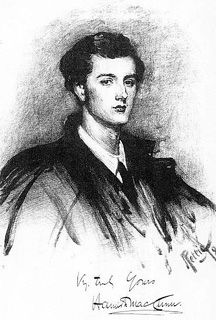
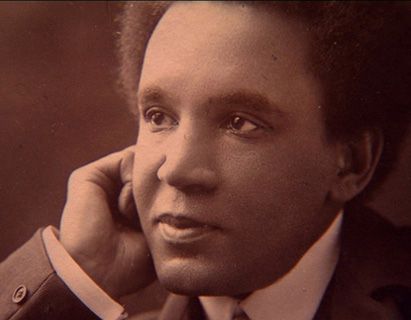
Butterworth, MacCunn, Coleridge Taylor
Source: Decca Argo CD (my rip!)
Format: mp3, 320k/s (CBR), DDD Stereo
File Size: 157 MB
Download Link (re-up) – https://mega.co.nz/#!IFQSmLDR!NQUHr0q8mP5C5PosrwzKT3ndIcZzNoaOK4KvPrV itqc
Enjoy! Don’t share! Buy the original! 🙂
Michael Horwood was born in Buffalo, New York, on May 24, 1947. He studied music composition and theory
at the State University of New York at Buffalo with Lejaren Hiller, Lukas Foss, and Istvan Anhalt
Horwood is the model eclectic: His more than seventy compositions constitute a kaleidoscope of the traditional and
the avant-garde spanning a wide variety of contemporary idioms including twelve-tone, theatre pieces, electroacoustic
(both live and pre-recorded), jazz, minimalism and neo-romanticism.
The four compositions on this album embrace different styles, resulting in extremely colorful and resourceful compositions:
The two programatic suites, the National Park Suite, and the Amusement Park Suite, in particular, will
appeal to film music lovers with their lively pictorialism and tremendous energy. The latter is also preset in the
dynamic Symphony No.1.
Music Composed by Michael S. Horwood
Played by the Sinfonia Varsovia
With Joseph Kubera (piano)
Conducted by Ian Hobson
"Canadian/American composer Michael S. Horwood really knows what he wants and how to get
it, and this disc serves as the perfect introduction to his very enjoyable art. Horwood’s range of
reference is very wide. The opening of the National Park Suite, with its stentorian trombones, might
recall the stark nature music that opens Mahler’s Third Symphony–not because Horwood is imitating,
but because he understands what such gestures mean. The Amusement Park Suite (each of its five
movements is named for a different ride) closes with a brilliant "Roller Coaster" that’s a close cousin to
Honegger’s Pacific 231 and Villa-Lobos’ Bachianas Brasileiras No. 2. Again, the comparison is not to
Horwood’s disadvantage. The main tune is splendid, and I can only admire the fact that after the initial,
very graphic wind-up and plunge, he busies himself with writing good music rather than remaining
merely literal.
The two "serious" works on the program, Symphony No. 1 and Intravariations (for piano and orchestra),
have all the same qualities of the lighter works: a deft orchestral touch and a real sense of purpose, an
accuracy of expression and clarity of vision that let you know right away that you’re in good hands. In
the opening "fragmented" (Horwood’s term) allegro of the symphony, he manages to emphasize its
mosaic-like construction while at the same time imposing audible coherence on the arrangement and
presentation of his material. "Fragmented" doesn’t mean "formless". The second-movement Passacaglia
fun???bre offers the perfect contrast, while the perpetual motion finale provides an emotionally clinching
conclusion. Though brief (less than 20 minutes), Horwood’s symphony packs a lot of expression
into a small space.
Intravariations also is extremely inventive. The principal theme is memorable, with a brooding quality
that contrasts well with its later variations. Horwood clearly has a fine feeling for musical form, and
he fastens onto elements in the theme that permit you both to enjoy each variation as it comes while
also making audible connections among them. Pianist Joseph Kubera plays with confident bravua, and
throughout this program Ian Hobson and the Sinfonia Varsovia seem to be enjoying themselves in
giving each work a 100 percent effort. Albany’s sonics are typically excellent, revealing all of the music’s
color and impact in a warm, natural acoustic space. Collectors take note: this is 80 minutes of terrific
music by a composer of real personality and style. Try it. I feel certain you’ll want more."
David Hurwitz, ClassicsToday http://i1084.photobucket.com/albums/j415/wimpel69/p10s10-2.gif
Source: Abany Records CD (my rip!)
Format: mp3, 320k/s (CBR), DDD Stereo
File Size: 200 MB (incl. booklet)
Download Link (re-up) – https://mega.co.nz/#!Qht2EJaJ!dFoZ0TpIgWxOL7_rm8poaQIwHzca1Wy8DXsgF6g CvyQ
Enjoy! Don’t share! Buy the original! 🙂
Thank you so much, wimpel!
Charles Tomlinson Griffes (1884-1920) was considered one of the most promising and imaginative
American composers of his time, great things were expected of him. His early death, however, put an end to
that, so today we’re left with a few isolated, intriguing works that only hint at the important voice he could have become.
One such score is the 50-minute "druid legend" The Kairn of Koridwen, a ballet scored for only eight instruments but displaying
a fascinating combination of instrumental colors while maintaining an atmosphere of austerity and restraint. The style is
remarkably advanced for an American(!) score of the time; Griffes was obviously familiar with what was going on in Europe.
Emil De Cou’s account was the very first (and, so far, the only?) recording of this, Griffes’ most sustained achievement.
Music Composed by Charles Tomlinson Griffes
Played by the Ensemble M
Conducted by Emil DeCou
"The Kairn of Koridwen: A Druid Legend, or, "The Sanctuary of the Goddess of the Moon," was originally composed in
piano score form — not as a piano part — then arranged by composer Charles Griffes. The original, complete manuscript
for the dance drama in two scenes, written for eight solo instruments, was scattered. In the 1960s, a score was
reconstructed by the Free Library of Philadelphia.
The Kairn of Koridwen consists of an unusual group of instruments. Griffes was exploring Oriental music, and thus, the
arrangement does not utilize any strings. The scoring for the pantomime is: flute, two B flat clarinets, two horns in F,
celesta, harp, and piano. The Kairn utilizes a synthetic scale that causes the harmonies to consist of a large quantity of
augmented seconds, fourths, and fifths. Because of the synthetic scale, and also the manner in which Griffes wrote the
manuscript, it is difficult to tell exactly what key each of the scenes is in. Although the piece sounds somewhat
Impressionistic, Griffes’ use of atonality is heightened.
Kairn is adapted from a text by Edouard Schure (1841-1929), Les Grandes Legendes de France. The tale is about
druidesses who worship Koridwen, the goddess of the moon. One druidess, Carmelis, has to choose between her love,
the Gallic warrior, Mordred, and her religion. According to her religion, Carmelis is supposed to kill Mordred for seeking
a prophecy, but cannot. She reveals to Mordred the secret of his future, then sends him away. Carmelis wants to
believe that she will find a happier life after death. The druidesses then find Carmelis dead.
The music is intended for dance, and the characters are meant to convey a story without using customary dance
steps. The piece consists of "Scene One: Introduction," beginning with a lone clarinet; "Bringing out the Cauldron,"
an ominous view of what is to come, portrayed by dissonant, heavy chords; "Fury of the Priestesses" a flurry of
flute, horn, and harp; "Scene Two: Introduction," a free-floating intertwining of instruments; "She Begins to Rise,"
serene colors portrayed along with disturbances; and "Dirge," a slow passage that paints a dismal picture."
All Music
Source: Koch International CD (my rip!)
Format: mp3, 320k/s (CBR), DDD Stereo
File Size: 108 MB
Downoad Link (re-up) – https://mega.co.nz/#!ltNwhDqS!L-urCnDB4PqzQRo2ni9FYChpGj0dpcIeoXCof8ob_os
Enjoy! Don’t share! Buy the original! 🙂
Mikis Theodorakis is best known for Zorba the Greek, but the prolific composer has been active in all genres,
extensively so in theatre and ballet music. Many of his works he created in response to turbulent times in Greek society
and politics (pre-Euro crisis), when Theodorakis himself was subjected to frequent imprisonment and occasional torture.
The creation of Carnaval was influenced by the Greek civil war. In August 1947 Theodorakis wrote the first sketches on the
island of Ikaria, a place of exile to which he had been deported shortly after the beginning of the civil war. From fellow prisoners
he heard the folk song Captain Andreas Zeppos, the melody of which was used in the first part of "Carnaval". The final version
of the ballet composition commissioned by the Opera of Rome was completed in 1953. But it was not before 14 April 1954
that Greek Carnaval could be performed for the first time by the Greek ballet ensemble at the Opera of Rome. The choreographer
was the legendary Rallou Manou, the conductor of the opera orchestra was Andreas Paridis. The plot of the ballet had been
created by the two important authors Vassilis Rotas and Spiros Vassiliou. The work’s greatest success was in Paris in 1958,
in a revised version entitled Le feu aux poudres. Finally, parts of Carnaval were used in the most successful ballet
composition by Theodorakis, in the Zorba ballet suite of 1987.
Raven, a dark mysterious poem, a tribute to Edgar Allan Poe (and his poem of the same name), which Giorgos Seferis
wrote in the remote Albanian town of Koritsa in early 1937, served Mikis Theodorakis as basis for the composition of the same
name which he created between 7 and 15 January 1970 as prisoner of the junta. A ‘chanson fleuve’ with a prevailing mood of
tragedy, dedicated to his friend and fellow composer Jani Christou who had been killed in an accident shortly before.
Music Composed and Conducted by Mikis Theodorakis
Played by the St. Petersburg State Academic Capella
With Alexandra Gravas (mezzo-soprano)
"Mikis Theodorakis has played many public roles since his emergence in the mid-twentieth century,
as Greece’s most successful composer of serious music, a leader in the field of film music, and a
symbol of resistance to oppression. Born Michalis Theodorakis on the Aegean island of Chios, he was
a shy child who enjoyed poetry and music. His interest in music was shaped by his gypsy-like
childhood, as his father, a government official, was continually transferred throughout the Greek
islands; in the process, Theodorakis was exposed to a huge variety of traditional Greek music, all
of which shaped his sensibilities as a composer. He also displayed a strong interest in liturgical music
and took up the violin, which he studied at the Patras Conservatory of Music. Theodorakis began
composing music as a boy. He did his best to continue studying music during the Axis occupation,
but after he was refused admission to the Athens State Conservatory, Theodorakis turned to his
other great passion, politics. He was converted to Marxism by his patriotism and the sacrifices he
saw made by the communists fighting the occupying forces. He linked his musical and political
passions, composing pieces such as his oratorio Third of December, a memorial to partisans killed
by the British. Theodorakis’ Communist affiliations led to his imprisonment twice by the postwar
government, and he was held under brutal conditions for more than two years, until he was released
with a case of advanced tuberculosis in 1949.
During the 1950s, Theodorakis began emerging as a composer and critic. He wrote and arranged
scores for ancient dramas, composed a pair of ballets, Orpheus and Euridice and Greek Carnival,
and began writing for movies. In 1954, he received a grant to study at the Paris Conservatory,
where his teachers included Olivier Messiaen, and he composed twenty-one works during his four
years in Paris. He continued his work in films as well, most notably in Ill Met By Moonlight (1956)
directed by Michael Powell and Emeric Pressburger, and in Powell’s Honeymoon (1959), which
featured Theodorakis’ ballet The Lovers of Teruel (which was later the basis for a separate film).
He also became a critic of the musical establishment in Greece, insisting that composition could be
invigorated by a return to their music’s roots and the traditional sources he’d known as a boy.
He continued composing for the theater and also in popular music, and in 1964 wrote the score
for the movie Zorba The Greek, which was a huge hit and exposed a vast new audience to
Theodorakis’ music. Theodorakis’ reputation was made among popular listeners as well as serious
music circles, but his music career was soon overshadowed by politics.
As a member of the Greek parliament in the 1960s, he had built a reputation as a political activist
and had a potent political organization behind him. When a group of Greek army colonels seized
power in 1967, Theodorakis went underground and began organizing resistance to the junta, and
was arrested twice; held for two years, he was released on humanitarian grounds following a
massive international outcry. He’d continued composing, even smuggling compositions out of prison,
and wrote a song cycle devoted to the cause of the resistance. Theodorakis returned to the
Greek parliament after democracy was restored, but has been increasingly known for his music
in the decades since. In 1988, the expanded version of his first symphony received its American
premiere, and his works have comprised entire programs at such venues as Avery Fisher Hall in New York."
All Music
Source: Intuition Classics CD (my rip!)
Format: mp3, 320k/s (CBR), DDD Stereo
File Size: 147 MB
Download Link (re-up) – https://mega.co.nz/#!MpchBbzT!YYZbMw2eMyOA3EZC30KoYGbrDq4B1z8n3rGCSIq Mtf0
Enjoy! Don’t share! Buy the original! 🙂
Little is known about the contemporary American-Jewish composer Richard Honoroff. He doesn’t appear
to have his own website, nor could I find a picture of his in google. Also, this album of two symphonies
and an independent one-movement work, all devoted to remembrance of the dead and the heritage they
left us with, is probably the only CD of his works that exists. As is, the music in all three pieces mixes
the neo-romantic and the minimalistic, the latter evident through long cascades of ostinato figures.
Symphony No.1 ("Shoah") is obviously inspired by the Holocaust, while No.2 ("From Ashes Reborn")
mourns the victims of the Vietnam War.
Music Composed by Richard Honoroff
Played by the Moscow Radio Symphony Orchestra
With the Moscow Chamber Chorus
Conducted by Alexander Mikhailov
"The notes for this release tell us very little about the composer, except that he is a multi-faceted
musician: pianist, composer, equally at home in popular music as well as in concert music. He apparently
wrote a considerable amount of music for radio and television, and composed many logos for various
American broadcasting corporations as well as those for the 1988 and 1992 Olympic Games coverage.
He is also quite active as a jazz musician.
Needless to say that the three recent works recorded here are in a totally different league and quite serious
in intent. Both Symphony No.1 "Shoah" and Testament were composed for the Shoah Concert in Berlin, and
were first performed there in 1994. The composer mentions that his own family had to escape from Nazi
Germany whereas his wife’s family suffered through the death camps. These commissions were thus most
welcome, allowing the composer "to play a part in insuring that this dark history of the Holocaust would
not pass unforgotten". He does so in quite simple, though eloquent terms, both in the First Symphony and
in its companion piece Testament. As far as I can judge, Honoroff’s music is rather non-developmental,
but rather proceeds by repetition of some simple, memorable basic material, continuously varied in
instrumental colours, somewhat in the same way as in Ravel’s ubiquitous Bolero or Kilar’s Exodus, to mention
two fairly obvious points of comparison. While listening to the First Symphony, I kept thinking of Constant
Lambert’s remark about the use of folk songs in concert music: "All you can do with it, is repeat it… louder".
Fortunately enough, Honoroff’s folk-like, modally inflected themes are quite memorable and his scoring is
remarkably varied. Moreover, he never attempts at making too much of his themes, so that the music
never outstays its welcome. One may, however, feel somewhat frustrated by the lack of development in
music such as this. The movements often stop abruptly with too little sense of real, goal-oriented finality.
But, and this is a big "But", the music, though unquestionably sincere, never attempts at plumbing any
great depths. It rather aims at direct expression and communication in the most direct terms, avoiding
any overblown rhetoric. The poignancy of much of the music is enhanced by its utter simplicity and –
most importantly – its restraint. Even in the second movement of the First Symphony commemorating the
Holocaust proper, the music is often redolent of the quietest, most lyrical parts of John Williams’ beautiful
score for Schindler’s List rather than, say, of Sch???nberg’s A Survivor from Warsaw. The symphony’s
companion piece Testament is quite similar in spirit and letter, and might actually have been its fourth
movement. A sincere, deeply felt elegy for all its formal and thematic simplicity.
The Symphony No.2 "From Ashes Reborn", too, is mostly elegiac, this time looking back on another 20th
Century tragedy, the Vietnam war. The composer again avoids any jingoism and histrionics, and goes
on reflecting on the "pity of war", ending his piece with a peaceful hymn for chorus and orchestra using
a poem written by a Vietnam war veteran (unfortunately, no words printed in the booklet), which
beautifully rounds-off this moving work."
Music Web
Source: Centaur CD (my rip!)
Format: mp3, 320k/s (CBR), DDD Stereo
File Size: 129 MB
Download Link (re-up) – https://mega.co.nz/#!y950gYLI!Q2PSaCpqAdBUP35b1H8uYBb2znBotkTtVSCR_-Udoqg
Enjoy! Don’t share! Buy the original! 🙂
Chinese composer Lam Do-Ming studied abroad, in Toronto, at UCLA and took summer courses at
the Darmstadt Contemporary Music Festival. This album is an intriguing collection of symphonic
pieces written for an ensemble of Chinese traditional instruments (or folk orchestra, if you will),
that respect the local preference for suites of character pieces (a kind of folk light music),
but introduces advanced Western avantgarde technique. The mix is extremely colourful,
Music Composed by Lam Do-Ming
Played by the Central Chinese Orchestra of China
With Barbara Fei (soprano), Wong Ching (pipa)
Conducted by Kwan Nai-Chung
"Doming Lam was born in Macau in 1926, and as a self-taught composer was accepted to the
Royal Conservatory of Music in Toronto in 1954. Lam studied film music and production at the
University of Southern California from 1960-63 while studying avant-garde compositional techniques
independently. In 1970 he founded the Hong Kong Chinese Orchestra, gaining a laboratory for the study
of Chinese instruments upon which he based several successful compositions. He was one of the
founders of the Asian Composer’s League in 1973, and the founder of the Composer’s and Author’s
Society of Hong Kong. Lam became known as “the Father of New Music in Hong Kong.” He was honoured
with the Medal of Distinction for Cultural Contributions by the Governor of Macau in 1988. In 1994 he
moved to Toronto, but has since retired in Hong Kong. Lam’s style incorporates Western techniques in a
Chinese context, combining traditional elements with avant-garde techniques. His later work displays an
increasing Western influence, and since the 1990s, consists largely of liturgical music."
Source: Hugo CD (my rip!)
Format: mp3, 320k/s (CBR), DDD Stereo
File Size: 161 MB
Download Link (re-up) – https://mega.co.nz/#!JYQGVKIY!Wlc_GwGhSSrRsZIJYlr5dSpJfM9kkHxfh7NLQTh _m7o
Enjoy! Don’t share! Buy the original! 🙂
Although a native of Bordeaux, where he was born on 18th April 1873, (Jean) Roger-Ducasse had
little of the southern temperament, cultivating a taste for independence and making no concessions to
the public or to interpreters. He had high artistic aims, with the result that certain works are wonderful,
but are difficult to interpret, and are, therefore, less well known. With the help of his family Roger-Ducasse
went to Paris to study at the Conservatoire, where he was in the harmony class of Emile Pessard, studying
fugue and counterpoint with Andr??? G???dalge. In composition he studied under Gabriel Faur???, whose pupils
included Ravel, Enescu and Nadia Boulanger. He became a friend of Faur??? and one of his most important
successors.
From 1910 dates another important work that marks the attachment of Roger-Ducasse to historical and
symbolical subjects, Sarabande, an orchestral and choral composition. The subject is the death of a prince,
accompanied by a lute-player. After this he produced in 1913 his masterpiece, first performed on 31st
January 1914 in St. Petersburg. Orph???e uses a text that Roger-Ducasse had written himself, based
on the Georgics of Virgil. In this he returned to the forms of early opera, with the chorus taking the parts,
mingled with the instruments of the orchestra. The parts of Orpheus and Eurydice are mimed and not sung.
Ida Rubinstein mounted this neo-classical mime-drama at the Paris Opera in June 1926.
The evocative Nocturne de printemps was written in 1920, a work that suggests, in its gentle
orchestral colours, the sounds of a spring night in the woods. Night-birds call and the gentle beauty of the
scene is conjured up with an orchestral palette that must remind a listener of the timbres employed by Ravel,
the sound swelling to a climax.
The Petite Suite, in three movements, is an older work, dating from the turn of the century. It is also
more southern in spirit, in particular in its melodic lines. It was first conceived as a piano composition for four
hands, an important memory for Roger-Ducasse, since this was the first of his compositions to be played in public.
Le joli jeu de furet, an orchestral scherzo, was inspired by children in the schools that Roger-Ducasse
visited as inspector of singing and originally this work, like Aux premi???res clart???s de l’aube, was for choir. The
symphonic version provides a fuller work. The theme of the children’s round II court, il court, le furet, is heard
in snatches, giving the impression that the theme is built up gradually. Le furet, literally the ferret, an object
that in the game, Hunt-the-slipper, is passed from hand to hand, passes from instrument to instrument.
Music composed by (Jean) Roger-Ducasse
Played by the Staatsphilharmonie Rheinland-Pfalz
Conducted by Leif Segerstam
"This music is well worth discovering, with memorable melodies, superbly orchestrated
in mostly transparent textures. Segerstam leads his orchestra in detailed, sensitive
performances with well-balanced sonics."
American Record Guide
Source: Marco Polo CD (my rip!)
Format: mp3, 320k/s (CBR), DDD Stereo
File Size: 141 MB (incl. cover, booklet)
Download Link (re-up) – https://mega.co.nz/#!Qp9wia4C!MpllQTtPAsHaF9lnZTeOQn7GHwxHRiE30CK3J2J 9V8g
Enjoy! Don’t share! Buy the orginal! 🙂
Joaqu???n Turina was born in Seville on 9th December 1882. His first musical studies were in
the Andalusian capital with Garc???a Torres (harmony and counterpoint) and Enrique Rodr???guez (piano),
and in Madrid with Jos??? Trag???. His long stay in Paris, from 1905 to 1914, was decisive in his
education. There he continued his piano apprenticeship with Moszkowski and studied composition
with d’Indy. This was a time for the absorption of influences and for human contacts, since Turina
then began his friendship with Debussy, Ravel and Florent Schmitt. His first works had a certain
modernist tendency, but the advice of Alb???niz encouraged him to have recourse to Andalusian
popular sources.
The Sinfon???a sevillana is Turina’s orchestral masterpiece and the first important work of this
kind to be produced in Spain in the twentieth century. Written in 1920, the influence of the Paris
Schola Cantorum predominates through an idealised Andalusian nationalism, although the rhythms
used really come from popular tradition. Given that, the work is very flexible in form and skilful in
its orchestration. The titles of the movements are indicative of the poetic inspiration that
characterizes the music. The first movement, Panorama, offers a general picture; the second,
Por el r???o Guadalquivir (By the River Guadalquivir), is possibly the most accomplished, with its
poetic climate and subtle orchestration, while Fiesta en San Juan de Aznalfarache offers an
authentic explosion of colour and rhythm. The Sinfon???a won Turina the Gran Casino de San
Sebasti???n prize. It was first performed in Madrid by the Madrid Symphony Orchestra under
Enrique Fern???ndez Arb???s on 11th September 1920.
Turina quickly wrote two versions of his Danzas fant???sticas, the more intimate piano
version and the orchestral, first performed on 30th December 1919. This latter is the most
widely known, with the colour and the symphonic dimension it stamps on the dance music.
The three movements are given in the score with quotations from the novel La org???a by
Jos??? M???s, the author of stories set in Seville. The first, Exaltaci???n, is based on an Aragonese
jota, although transformed into something of greater profundity. Ensue???o (Dream) brings to
life the emotional heart of the work; it is a poetic romance that mingles Andalusian melodic
elements with the Basque rhythm of the zorcico. Org???a is a brilliant Andalusian farruca,
the melodic turns of which evoke flamenco. The Danzas were first performed by the
Madrid Philharmonic under Bartolom??? P???rez Casas on 13th February 1920.
Turina wrote his ballet Ritmos with Antonia Merc??? ‘La Argentina’ in mind, a ballerina
who had created a sensation in Spain in the 1920s and whom the composer greatly admired.
The work, however, was never staged as a ballet. It was first performed on 25th October
1928 in Barcelona by the Orquesta Pau Casals under Turina himself. Ritmos has music of a
strongly nationalist stamp, skilfully orchestrated; in the last movement the earlier motifs
are recalled, giving the work a cyclic character. At the time of the first performance it
was said that the different movements ran through a gamut of colours, from the darkest
to the brightest, but this interpretation now seems somewhat trite.
La Procesi???n del Roc???o, completed in 1912, was Turina’s first orchestral work and
the one that brought him to the attention of the wider public. It is a symphonic poem that
describes the procession celebrated once a year in the village of El Roc???o, in the marshes
between Seville and Huelva, adjacent to the present Do???ana nature reserve, a very
picturesque scene with its gathering of carts and horsemen.
Music Composed by Joaqu???n Turina
Played by the Bamberg Symphony Orchestra
Conducted by Antonio de Almeida
"Throughout the LP and CD era we have had collections of Spanish orchestral music featuring
one or other of Turina’s exotic evocations, but this is the first proper historical assessment of his
achievement, and it immediately shows his extraordinary orginality and sensitivity to Mediterranean
atmosphere. Ravel’s Spanish scene-painting is deflected through a prism of cultivated awareness;
a Frenchman travelling south and responding with a personal, very Gallic sensibility. But Turina was born
in Seville and the Spanish light was inherent in his very consciousness. Thus, the opening of the Danzas
fantasticas immediately brings a piercing shaft of sunlight from the violins, then the spirit of the dance
takes over. The mood of ”Exaltacion” soon appears in the full orchestra, but there are kaleidoscopic
changes of mood and the close brings haunting distanced effects, as if everything were happening in
the imagination. ”Ensueno” (the second number) opens dramatically, then evening bells toll gently and
woodwind intone the undulating dance music; the soft evening string perfumes drift in with echoing flutes,
and again the gently nuanced textures suggest a blissful dream. Even the energetic ”Orgia”, which opens
with thrusting lower strings and bravura horns, makes way for the most delicate woodwind imagery and
fragile violins.
La procesion del Rocio, Turina’s first big success, was composed six years earlier, in 1913, and has a
comparable ambivalence between the opening energetic ”Triana” with its seguidilla and garrotin dance
rhythms and the procession itself, which begins with flute and tabour and then reveals a tenderly yearning
tune in the lower strings. Following this the music moves on to describe a gaudy religious occasion,
full of Latin hyperbole.
The Sinfonia sevillana belongs to 1920, and brings even greater skill in placing atmospheric pictorialism
within a firm structural framework. The opening ”Panorama” is self-descriptive, but the flamenco spirit
soon brings in the dance rhythms. In the evocation of the ”Por el Rio Guadalquivir” (the river which runs
through Seville) an exquisitely delicate violin solo leads to a shimmering imagery of the sunshine on the
rippling waters, while the ”Fiesta” finale errupts with exuberance and ends grandly.
Ritmos was written in 1928. Described as a ”Fantasia correografico” it is neatly conceived, a joined series
of six vignettes of enormous character and charm. The titles speak for themselves. A solemn ”Preludio” leads
to a measured ”Danza lenta”; then a ”Vals tragico” acts as a foil for an engagingly scored ”Garrotin”, while a
delicate ”Intermedio” anticipates the lighthearted closing ”Danza exotica”, which recalls earlier themes
in its vigorous coda.
The Bamberg Symphony Orchestra plays all this music with great distinction; full-bloodedly, yet with
appealing finesse. Woodwind solos (especially Turina’s dark-eyed favourite, the cor anglais) are a constant
delight and Almeida ensures that the suffusing dance rhythms (Peterna, zapateado, garrotin, etc.) are all
glitter and be gay; yet when the composer’s mood is vigorous, there is plenty of orchestral vehemence.
The recording is wide ranging, with the resonance adding a glowing bloom overall. It brings lustrous,
often translucent string sounds, and only occasionally masks detail a little when the ample lower
spectrum is at its most vociferous."
Gramophone
Source: RCA-BMG CD (my rip!)
Format: mp3, 320k/s (CBR), DDD Stereo
File Size: 133 MB
Download Link (re-up) – https://mega.co.nz/#!ZskhUZwY!EsPbX1ChlA9m4y0pl9uEr1uq1SoHPGuYIqmQ_PL YkkU
Enjoy! Don’t share! Buy the original! 🙂
Japanese program music, of which I’ve got almost none).
No.171
In the generation that followed Jean Sibelius, the versatile Leevi Madetoja (1887-1947) was easily
among the most important Finnish composers. Like Sibelius, Madetoja composed symphonies that helped define
his stature: indeed, his three are still his most recorded works, even if they remain well outside the standard
repertory. His opera Pohjalaisia (The Ostrobothnians; 1923 – an orchestral suite from which is included here!)
has also received considerable attention, especially in his homeland, and his ballet Okon Fuoko (1930) and
many of his songs have rightly garnered acclaim as well.
Madetoja employed folk melodies from Ostrobothnia (the region of Finland where he was born), and many of
these divulge a modal or religious character in their somber and sometimes stern character. Madetoja wrote in
an accessible, though often dark style and was a master of orchestration, known for clarity of textures
and subtle instrumental color.
Music Composed by Leevi Madetoja
Played by the Finnish Radio Symphony Orchestra
Conducted by Jukka-Pekka Saraste
"Madetoja’s symphonies have fared rather well on record, and it isn’t undeserved.
Stylistically, the work is "anti-Sibelius" – in the sense that the composer was one of those
attempting to distance himself from the shadow of the older composers and ended up
sounding at least superficially rather like him. The closest comparison is, I think, the music
of Rangstr???m and Alfv???n – and maybe even more obviously composers like Roussel and
Magnard – and in terms of quality Madetoja’s music also belongs to that group; it is
very well-crafted and rather inventive.
The third symphony, dating from the 1920s is atmospheric and quite memorable, full of
interesting, fully developed ideas. The couplings are the slightly more forward-looking ballet
music from Okon Fuoko and the memorable and strikingly atmospheric suite from his opera
"The Ostrobothnians" (for which an eminently recommendable complete recording under
Saraste also exists). Recommended."
Amazon Reviewer
Source: Finlandia CD (my rip!)
Format: mp3, 320k/s (CBR), DDD Stereo
File Size: 155 MB
Download Link (re-up) – https://mega.co.nz/#!I1MAQBKC!awA9W2dhxH3qtbz6jg3f5HWFClYJmIN86kzAxLw 7hwE
Enjoy! Don’t share! Buy the original! 🙂
Many thanks!
the ultimate romantic picaresque novel – proceeding from the least to the best-known.
No.172
Florencio Asenjo was born in Buenos Aires, Argentina, where he studied the various
tools of music making with the Spanish composer Jaime Pahissa. When Asenjo
began his musical life, he found overwhelming the monumental amount of repetition
that characterized much of Western music. Asenjo labeled his own approach maximalism,
the objective of which was to achieve a high density of content in constant change. It was
not that repetition was to be forbidden, merely used sparingly when really necessary.
Standard formal patterns were to give way to the pure relatedness of new musical
meanings brought about by their respective dynamics.
A Thousand and One Nights (2007) consists of ten impressions for clarinet
and orchestra attempting to describe the subjective reactions to ten stories from the
famous book. The clarinet represents Sheherazade’s voice guiding the events related,
events whose common moral is that the impossible does happen.
Three Images from Don Quijote (2008) are also subjective impressions from
three chapters of Cervantes’ book, a book which shows influences of “The Thousand
and One Nights.” Even though the “Nights” were not translated into European languages
until the XVIII century, they and their forerunners were known in Europe long
before, especially in Moslem Spain and Northern Africa where Cervantes and his
brother were slaves for several years. Also, just as Sindbad the Sailor and Sindbad the
Wise owe to “The Odyssey,” some scholars consider it a given that Boccaccio must
have known the story of “The Nights” to explain its similarities with “The Decamerone”
whose tales influenced so many authors including Cervantes.
The name Sinfonia Concertante has been used to describe different kinds of
musical works. Sometimes it refers to a concerto for one solo instrument in which the
orchestra has a greater role than that of merely accompanying the soloist; sometimes
it means a concerto for just a few designated instruments; here Sinfonia Concertante
(2008) gives more than a few instruments of the orchestra the opportunity to play solo
as they emerge from the ensemble.
Music Composed by Florencio Asjeno
Played by the Bohuslav Martinu Philharmonic Orchestra
Conducted by Kirk Trevor
"Although he has more than a half-century’s experience in teaching and writing about
mathematics, “music came first,” says Florencio Asenjo.
The mathematics professor emeritus’s current work in math and logic consists of writing
and occasional lecturing rather than regular classroom teaching, permitting more time for
Asenjo’s early love: composing.
As a teenager, Asenjo studied with Spanish composer Jaime Pahissa, with whom he honed
his skills in harmony and orchestration. Asenjo’s operatic, orchestral and chamber music
compositions have been performed in his native Argentina as well as in the United States and Europe.
The octogenarian’s most prolific output as a composer of neoclassical music has come in his retirement.
Since 2003, recordings of his compositions, all conducted by British conductor Kirk Trevor and performed
by various Eastern European symphony orchestras, have been released at a pace of about one each year.
Asenjo’s seventh recording with Trevor, released in 2009, includes Asenjo’s 2008 composition
“Sinfonia Concertante” as well as two works based on literature. His 2007 piece for clarinet and orchestra,
“A Thousand and One Nights,” is his interpretation of 10 stories selected from the Arabic folktale and “
Three Images from Don Quijote” represents Asenjo’s musical impressions of three scenes from Miguel
de Cervantes’s classic story.
Asenjo said he always has considered mathematics and music to be complementary. “They did not collide.
I jumped from one to another, no problem. It is just a natural thing to do,” he said.
In writing a score, “There is a pattern there, and the pattern is not arbitrary— almost as in the way a
proof of a theorem is organized.” Still, he finds it difficult to describe the connection between music and
mathematics. “I don’t think there is an explanation that serves. They are complementary activities,” he said."
Source: Albany Records CD (my rip!)
Format: mp3, 320k/s (CBR), DDD Stereo
File Size: 136 MB (incl. cover, booklet)
Download Link (re-up) – https://mega.co.nz/#!8hMRHD4C!CZpgWgVnkIzr8HWDVJGy7HsRXUxTh8UsxxycWjN rxdM
Enjoy! Don’t share! Buy the original! 🙂
Dear guilloteclub, I don’t know where or how you came to the idea I was speaking for anyone but myself. However, if I had your lack of eloquence and understanding I would gladly welcome anyone doing so.
This is an enganging collection of Kurt Weill rarities, including several background scores
he wrote for plays and revues in 1920s Berlin. The "Roaring Twenties" are written all over
these spry, spunky, often brusque compositions, and if you know the composer from his famous
operetta The Threepenny Opera or from Mahagonny, you get the same style here.
Some of the music are songs, the rest (like the Bastille Music or the Suite panam???enne)
are written for small orchestra.
Music Composed by Kurt Weill
Played by the Ensemble Modern (Frankfurt)
With Rosemary Hardy (soprano)
Conducted by HK Gruber
Tracks
1. Berlin im Licht, song for voice & piano
2. Slow Fox (Langsamer Fox) and Algi-song, foxtrot for piano with vocal refrain
3. Klops-Lied (Meatball Song, ‘Ich sitze da un’ esse Klops’), for soprano or tenor, 2 piccolos & bassoon
4. Ach, w???r mein Lieb ein Br???nnlein kalt, song for soprano, flute, viola, clarinet, horn & bassoon (or piano; Frauentanz), Op. 10/3: Arr
5. Frauentanz (Ladies’ Dance), song cycle for soprano, flute, viola, clarinet, horn & bassoon (or piano), Op. 10
6. Bastille Music, suite for wind ensemble (arr. by David Drew from ‘Gustav III’)
7. ???l-Musik (Oil Music), suite for voice & wind ensemble (arranged by David Drew from ‘Konjunktur’)
8. Suite Panam???enne for orchestra (arranged by David Drew from ‘Marie Galante’)
9. Cowboy Song (‘Oh the Rio Grande’), for voice & piano (from ‘Johnny Johnson’)
10. Captain Valentine’s Song, for voice & piano (from ‘Johnny Johnson’)
11. Die stille Stadt, song for voice & piano
Source: Largo CD (my rip!)
Format: mp3, 320k/s (CBR), DDD Stereo
File Size: 130 MB
Download Link (re-up) – https://mega.co.nz/#!J0lHFZJb!Nq1ThjICNcTCquoGAiOoZnRCz2lePjdxy9Ku61H lNQA
Enjoy! Don’t share! Buy the original! 🙂
The five works that make up this CD are all based on Cervantes’ masterpiece and all written by Spanish composers.
They give us a musical insight into a literary work that is still vibrant and relevant today, not only as an
entertaining, thought-provoking text, but also as a source of artistic inspiration. From Barbieri’s mid-nineteenthcentury
stage work (1861) to Jorge Fern???ndez Guerra’s new soundtrack for Pabst’s 1930s film (2005), from echoes
of Spanish song to the European symphonic tradition, Don Quixote has inspired musical creations and re-creations
ranging from the faithful to the utopian, from attempts at programmatic depictions of the knight’s thousand and one
tales to heartfelt idealisations — and never has the past seemed so present.
Francisco Asenjo Barbieri wrote the incidental music to Don Quijote de la Mancha, by Ventura de la Vega,
providing musical numbers for each of the three acts. Included here are an aria for tenor, a ballet sequence and a
finale with choir. This is typical mid-19th century romanticism, on the light side, especially in the ballet music.
The symphonic poem Don Quijote velando las armas by Gerardo Gombau Guerra (Salamanca 1906–Madrid
1971) was the composer’s entry for the Madrid Conservatory’s composition contest of 1945. Programmatic in nature,
it sets out to portray specific episodes from the novel, to which Gombau makes repeated references in his score.
Structurally it consists of a prelude followed by a sinfonia, whose first theme represents Don Quixote and whose
second portrays Dulcinea and which, after a development section in which various different episodes are depicted, closes
with an inverted recapitulation — in other words, we hear Dulcinea’s theme first, then Don Quixote’s.
Ausencias de Dulcinea (Dulcinea’s Absence) is another symphonic poem, this time for bass, four sopranos and
orchestra, written by Joaqu???n Rodrigo (Sagunto 1901–Madrid 1999) between December 1947 and January 1948.
The poem is structured in twelve numbers which feature constant changes of character and tempo to
express the shifts between the heroic and the romantic, a contrast defined right from the start by the treatment
of the voices and the orchestra.
Jos??? Garc???a Rom???n (b. Granada 1945) composed La resurrecci???n de Don Quijote for string orchestra
between November 1993 and February 1994 in response to a commission from the Orquesta y Coro Nacionales
de Espa???a. A highly complex, dense, almost obsessive texture is created, with minimalist touches, a texture in
which the composer investigates timbre and creates a highly individual and poetic idiom, more tonal than in
his earlier works. The use of the Quixote theme is metaphorical, a very free re-creation in which Garc???a
Rom???n is trying to convey, in his own words “a way of expressing in music … the desire to see ride again all
those heroes."
Tres momentos de Don Quichotte Jorge Fern???ndez Guerra was written between August 2004 and
February 2005 and first given at Madrid’s Teatro de la Zarzuela on 14th April 2005 by the Orquesta de la Comunidad
de Madrid. What we have on this CD are three of the more than twenty numbers that made up a new score for a
screening of G.W. Pabst’s 1933 film Don Quichotte. A suite in three movements is presented here:
The first, letter J, represents Don Quixote’s first expedition: the hero wakes up Sancho and the two set off by night
for the country, though not without a delay so that Don Quixote can sing of Dulcinea. The nocturnal setting is
echoed in a musical Adagio. The second, letter V, represents the final exploit, which in Pabst’s film is the
attack on the windmills in which the knight comes off worst and which leads on to his death scene. The last of
the three, letter X, is the epilogue to the film, which shows the burning of the book in reverse, a rebirth from
the ashes. This long, ecstatic sequence is accompanied by Don Quixote’s final song.
liner notes
Music by Joaqu???n Rodrigo, Jos??? Garc???a Rom???n, Francisco Asenjo Barbieri,
Jorge Fern???ndez Guerra & Gerardo Gombau
Played by the Orquesta y Coro de la Comunidad de Madrid
Conducted by Jos??? Ram???n Encinar
"Naxos has assembled an intriguingly diverse selection of music inspired by Don Quixote. The range of
styles represented here dictate that the CD will be of most interest to listeners with broadly eclectic
tastes because the music ranges from typically Romantic music from the mid-nineteenth century to
very challenging and uncompromising modernism. For the listener with open ears, all of the pieces
contribute something to an understanding of Don Quixote — the novel is so universal in its humanism
and so catholic in the range of experience it describes that no single aesthetic could adequately
address it. Joaqu???n Rodrigo’s 1948 Ausencias de Dulcinea (Dulcinea’s Absence) is a quirky but hugely
attractive piece. Scored for orchestra, baritone, three sopranos, and one mezzo-soprano, it is a
melancholy meditation on Don Quixote’s search for his ideal Dulcinea, who is given voice by the women.
This is brightly colored music, fragrant with the Spanishness that’s typical of much of Rodrigo’s work,
and it successfully evokes the poignancy of the Don’s deluded quest. Despite its optimistic title, Jos???
Garc???a Rom???n’s 1994 Le resurrecci???n de Don Quixote is relentlessly dark — an agonizingly nihilistic
modernist nightmare that illustrates the hellish emptiness the humiliated Don would have experienced
when he realized the futility of his dream. Jorge Fern???ndez Guerra wrote a new score for G.W. Pabst’s
1933 film Don Quichotte in 2005. It is very good film music — it retains a relatively low profile, but is
colorful, inventive, and driven by a musical logic that is clearly not merely illustrative of what is going
on onscreen. Gerardo Gombau acknowledges his debt to Strauss in his1945 tone poem Don Quijote
velando las armas (Don Quixote keeps vigil over his armour), and while it is indeed Straussian in its
musical language, there is no danger if it supplanting Strauss’ own Don Quixote.
The performances by Orquesta del la Comunidad de Madrid, conducted by Jos??? Ram???n Encinar,
are consistently lively and committed, as persuasive in Francisco Asenjo Barbieri’s 1861 Don Quijote
as in Rom???n’s bleak existential soundscape. Naxos’ sound is clean and full."
All Music


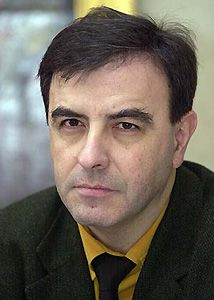

Barbieri, Rodrigo, Fern???ndez Guerra, Garcia Rom???n
Source: Naxos CD (my rip!)
Format: mp3, 320k/s (CBR), DDD Stereo
File Size: 142 MB (incl. cover, booklet)
Download Link (re-up) – https://mega.co.nz/#!1pMhHQ4b!dEsMIFjZ2pa057zaWJHXzjKPUosK57qywDzEZS_ hDPA
Enjoy! Don’t share! Buy the original! 🙂
Thanks again!
A collection of lively shorter orchestral works by some of the leading Belgian romantic composers of their time(s),
all based at some point or other in their lives in the beautiful city of Antwerp, which boasts a long and
rich musical history. Peter Benoit, the influential composer and teacher, was director of the local music
conservatory from 1867. Hence, several of the composers on this album are considered members of the
"Benoit-school". One of pupils, Lodewijk Mortelmans (whose Homeric Symphony I posted earlier),
later became director of the conservatory himself. His tone poem Lentedag (Spring Day/Idyll) does
not carry any specific program, but illustrates the lyricism, as well as the hustle and bustle of spring.
Bruiloftsfees (Wedding Feast) by another Benoit student, Flor Alpaerts, is even more vivacious
and dance-like; it’s the final piece of a symphonic trilogy entitled Pallieter.
Jef van Hoof, who ultimately succeeded Mortelmans as director of the Flemish Music Academy, spent
a few months in jail during WWI, as we was suspected to have collaborated with the Germans. In prison,
he wrote the First Symphonic Suite, divided into five short character pieces (see below) that
alternate between lyricism and sarcasm. Milenka is a ballet-pantomime by Jan Blockx, of which the
second scene, Flemish Fair, was extracted by the composer as a separate symphonic poem in several
short episodes, which, as in the van Hoof piece, are played without intermission. The last piece on the
menu here is Song and Dance at the court of Mary from Burgundy by Daniel Sternefeld, the youngest
composer in this collection, and is a section from the ballet Salve Antverpia of 1975.
Music by Lodewijk Mortelmans, Flor Alpaerts, Jef van Hoof, Jan Blockx & Daniel Sternefeld
Played by the Belgian Radio and Television Philharmonic Orchestra, Brussels
Conducted by Alexander Rahbari
"The "Romantic Symphonic Music" on the companion disc is essentially, though not intentionally, slighter. Mortelmans’s
Spring day is most agreeably lyrical, if a bit long, relying very much on washes of string tone. Alpaerts’s "Wedding feast"
is the third part of an ambitious symphonic poem and is not unlike one of the Flemish rhapsodies. Van Hoofs Symphonic
Suite No. I is notable for the trickling evocation of its first movement, "On the brook" and a very Delian picture of the
countryside; the excerpts from Block’s Milenka (a ballet-pantomime) offer pretty basic peasant dance music and a rather
agreeable love scene. Easily the most memorable music here is the awkwardly named suite, Song and dance at the
court of Mary of Burgundy, clever arrangements of fifteenth-century dance pieces by Susato and his contemporaries.
It is not unlike Respighi’s Antiche danze edarie per liuto; piquantly scored and engagingly tuneful.
All this little-known repertoire is played with fine idiomatic feeling and a nice combination of enthusiasm and expertise by
the excellent Belgian Radio and Television orchestra, and Rahbari knows how to change tempo and mood spontaneously.
The well-balanced recording is perhaps at times a shade over-reverberant for the rumbustious tuttis of the rhapsodies,
but offers beautiful string tone (especially in the Spring day) and a fullbodied and natural concert-hall setting for
these colourful scores. The notes are exemplary."
Gramophone
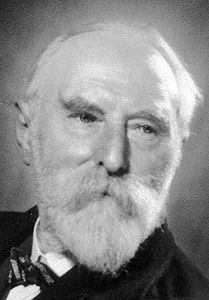
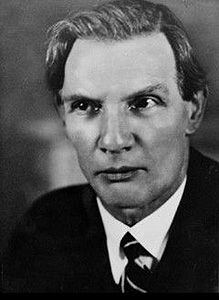
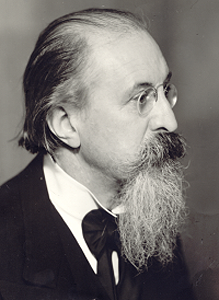
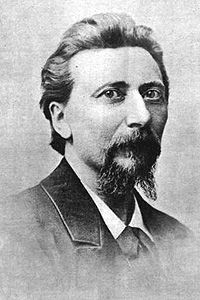
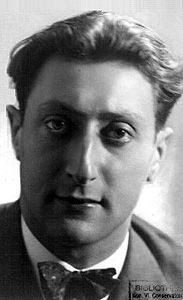
Top: Mortelmans, Alpaerts – Bottom: van Hoof, Blockx, Sternefeld
Source: Discover International CD (my rip!)
Format: mp3, 320k/s (CBR), DDD Stereo
File Size: 167 MB (incl. artwork, booklet)
Download Link (re-up) – https://mega.co.nz/#!g8tGBDQT!UG3wkCjn6yTXihCGMi_RIU1Y7b8LilDugqeepzH miXk
Enjoy! Don’t share! Buy the original! 🙂
———- Post added at 12:45 PM ———- Previous post was at 12:01 PM ———-
No.176
Lorenzo Palomo is a successful contemporary, neo-romantic Spanish composer who writes in an idiom
not too far removed from that of Joaqu???n Rodrigo. In his cantata Dulcinea, the composer approaches the
Don Quixote story with the focus on the knight errant’s elusive "love interest". The libretto is included.
"Dulcinea is a cantata-fantasy in ten scenes, full of contrasts, exuberant rhythms and soaring lyricism. The
composer uses a richly varied palette of orchestral colours to create the different scenes, beginning in
spectacular fashion with the choral Molinos de viento (Windmills). The chorus and orchestra alternate as a
frenetic, almost wild rhythm develops. The sound of a galloping horse heralds Don Quixote’s arrival. Soft,
delicate harmonic textures then envelop his impassioned ballad. A series of contrasting passages succeed one
another and the scene culminates in one of the work’s most lyrical episodes. In Scene VII Don Quixote and
Sancho get embroiled in a minor disagreement, as the knight tries to convince his squire that he should learn to
love a woman as he himself loves Dulcinea. The stage is now set for Sancho to sing with great passion of how he
does love his Teresa. The choral Seguidilla and Abracadabra, meanwhile, bring rhythmic variety to the
work, making them undoubtedly two of its high points. Dulcinea appears as a vision in Scene IX. The
orchestral colours here are poetic and dream-like, her song ethereal and otherworldly – this is the most
magical part of the work. Finally, Dulcinea transforms her song into the reality of Don Quixote’s dreams,
greeting him with the words “All honour to Don Quixote. May he be welcome in my realm.”
Orchestration of the utmost delicacy accompanies the last cadences of the vision of Dulcinea as the music
gradually fades away into the land of dreams."
Lorenzo Palomo
Music Composed by Lorenzo Palomo
Played by the Chorus and Orchestra of the Deutsche Oper Berlin
With Ainhoa Arteta (Dulcinea), Burkhard Ulrich (Sancho Panza), Arutjun Kotchinian (Don Quixote)
Conducted by Miguel Angel G???mez Mart???nez
"Lorenzo Palomo’s cantata, Dulcinea, is based on Miguel de Cervantes’ magnificent and influential literary
masterpiece “Don Quijote de la Mancha”. The novel has been adapted countless times into a ballet, a symphonic
poem and many others genres: You name it and you will almost certainly find it! So, do we really need one
more adaptation? I must say that at first, even before listening to the CD, I thought that we did not. Add to
this the fact that I am not a great fan of contemporary music – I continue to prefer the great classics – and
I dislike the Spanish language, which I find generally harsh and unpleasant to the ear. I convinced myself
that I was in for a couple of hours of disappointment. Well, I was wrong!
Dulcinea, a “Cantata-Fantasy for a Knight in Love”, as the composer calls it, was indeed a pleasant surprise
right from the beginning. Even before track three finished, I had been completely won over. The work is divided
into ten scenes and although based on Cervantes’ novel, it differs slightly from it. Palomo’s music is rather
visual; he uses the orchestra and choir to give us the images that emerge from Murciano’s rich poetry. For
example, the first scene of the Cantata, Los molinos de viento, effectively evokes the windmills through
whistling whispers of the chorus to resemble the noise of the wind on the sails. For the scene where
Don Quijote attacks the windmills, Palomo cleverly uses only the orchestra. He gives a very powerful
depiction of the scene, inviting the listener to use the imagination and become creative too. The score
is full of originality though deeply rooted in Spanish musical tradition, with all its vibrant colour, rhythm
and passion. Imaginative though Palomo’s music is, to my mind, the cantata becomes a truly great piece
due to Carlos Murciano’s exquisitely beautiful poems. Though based on the original Cervantes’ novel,
they exist as independent texts in their own right. Murciano keeps to the source but gives it a new,
fresh dimension not only by the sheer beauty and rhythmic flow of his words but also by daring to deviate
from the novel and go his own path. He nearly silences Teresa Panza – who talks too much in the original
– and gives a voice to Dulcinea; in the novel, she only exists in Don Quijote’s imagination. Murciano thus
creates what I think is the jewel in his elegant poetry for this piece: the Canto de Dulcinea (Ballad of
Dulcinea). If you understand Spanish, ignore the translations; good though they are, the full glory of
Murciano’s poems can only be truly appreciated if one reads them in the language in which he wrote them.
This Naxos CD is a live recording of the world premiere, which took place at the Konzerthaus Berlin,
Germany, on 15 May 2006. The performance was led by distinguished conductor Miguel Angel G???mez Mart???nez
with the excellent orchestra and chorus of the Deutsche Oper Berlin, and a quartet of outstanding singers.
I was a little doubtful about the casting of Armenian bass Arutjun Kotchinian as Don Quijote, purely because
I think that Kotchinian is a stage “animal”. I saw him as Count Rodolfo in Bellini’s La Sonnambula, at the
Deutsche Oper Berlin, in 2006, and he was magnificent. He stole every scene he was in even when superstar
tenor Juan Diego Fl???rez was present. Kotchinian is an exceptional singer with an incredibly charismatic
presence on stage and a superb actor. Although live on stage, he would be the perfect Don Quijote, I
wondered if he could bring the same kind of charisma in a purely audio recording. As I truly admire his artistry,
I am rather happy to say that I was completely wrong. His performance as Don Quijote is totally captivating.
His delicate phrasing, the poignant singing and the dramatic power, which he gives every word, make
Don Quijote’s lament very real and completely expresses the tragic, pathetic characteristics of the Knight.
Kotchinian is outstanding and must have been magnificent on stage."
Music Web
Source: Naxos CD (my rip!)
Format: mp3, 320k/s (CBR), DDD Stereo
File Size: 125 MB (incl. cover, booklet)
Download Link (re-up) – https://mega.co.nz/#!stElUSRb!fkMWx3hWEro3UiYefsbwmXHUQIYy5G-Rfc8guG8f2oc
Enjoy! Don’t share! Buy the original! 🙂
The Palomo is really interesting!
THANKS!!!
A huge amount of stuff here I’ve never heard of. I look forward to a good dabble and broadening my musical horizons.
Cheers
Anton Rubinstein was more controversial in his day as a composer and educator than he was as a pianist
and conductor. Consensus in the nineteenth century ranked him with Liszt and von B???low in the keyboard realm,
and even if his works stirred debate, they were more widely performed than in the twentieth century, when his
reputation as a composer went into decline. Rubinstein wrote in most genres, turning out hundreds of solo
piano pieces, as well as several concertos for piano, violin and cello, various chamber compositions, operas,
ballets, and choral and vocal works. His output in many ways parallels that of Tchaikovsky, and recent
reexamination of Rubinstein’s compositions augurs well for rehabilitation of many of them and a favorable
reassessment of his standing.
Don Quixote, a musical picture after Cervantes, was written in 1870, the year before Rubinstein’s period
as conductor of the Philharmonic concerts in Vienna and a subsequent American tour with Wieniawski. The
work has a clear enough narrative intention, from the chivalrous ambitions of Don Quixote, his love for the
imagined Dulcinea del Toboso, through various mistaken adventures to his death, a moment of final pathos.
Rubinstein shows us Don Ouixote’s awakening ambitions, as he reads romances of chivalry, dons his rusty
armour and mounts his steed Rocinante. A flock of sheep, mistaken for an army, is routed, and there is an
encounter with three village women, one of whom seems to Don Quixote to be his lady, Dulcinea. The women
laugh at him and run away, leading him to suppose that he needs to prove his valour further. Don Quixote
extends unexpected clemency to a gang of prisoners condemned to the galleys, and they repay him by
beating and robbing him. His complaints at the ingratitude of the criminals lead him to forswear chivalry,
and he returns home, to die in the presence of his friends, his niece and his house-keeper.
The musical portrait, Ivan the Terrible, is based on the work of Lev Alexandrovich Mey, the literary
source of four of Rimsky-Korsakov’s operas and of numerous songs by the Five and by Tchaikovsky. In
particular Rimsky-Korsakov’s first opera, generally known as The Maid of Pskov, which bears the alternative
title Ivan the Terrible, is derived from a play by Mey recounting the story of the Tsar’s attack on Novgorod,
leading to the death of Tucha and his beloved Olga, the latter turning out to be the Tsar’s daughter.
Music Composed by Anton Rubinstein
Played by the Russian State Symphony Orchestra
Conducted by Igor Golovschin
"Anton Rubinstein was born at Vikhvatinets in the Podolsk district of the Russian Empire, on the borders of
Moldavia, in 1829. A few years later his family moved to Moscow, and after early instruction on the piano from his
mother he took lessons from a teacher there, a certain Villoing, later to be the teacher of his brother Nikolay. He
gave his first public concert in Moscow at the age of ten. There followed four years of touring as a child virtuoso,
years that took him to Paris, to Scandinavia, Austria and Germany, and to London, where he played for Queen
Victoria. In 1844 the family settled in Berlin, where Rubinstein took lessons in harmony and counterpoint from
Glinka’s former teacher, the Prussian royal music librarian Siegfried Dehn.
In 1846 Rubinstein’s father died and the rest of the family returned to Russia, while he remained abroad in Vienna
and in Pressburg (the modern Bratislava), earning a living as he could by teaching and cynical about the support
that the ever-generous Liszt had seemed to offer, which took the form of a visit to his garret, with his entourage
of disciples. As a pianist Rubinstein was to rival Liszt in fame, and the latter speaks of him with grudging respect
as a composer and player, a clever fellow, but unduly influenced by the classicism of Mendelssohn, adding a less
charitable description of him as the pseudo-Musician of the future on the occasion of a visit to Weimar in 1854
for the first performance of his opera The Siberian Huntsman.
Rubinstein’s fortunes had changed as a result of a meeting with members of the Russian Imperial family during
the course of an earlier visit to Paris. On his return to Russia in the winter of 1848 he found support from the
Grand Duchess Elena Pavlovna, a German princess and sister-in-law of the Tsar, and with her active encouragement
he established in 1859 the Russian Musical Society and three years later the St Petersburg Conservatory. His
brother Nikolay, whose childhood prowess as a pianist had had similar exposure, founded similar organizations
in Moscow. Tchaikovsky was to be among the first pupils at the St.Petersburg Conservatory and among the first
teachers on the staff of its humbler counterpart in Moscow.
The new Conservatory aroused immediate enmity, in particular from the nationalist group of composers, bullied
into collaboration by the eccentric Balakirev. Rubinstein had opened battle by attacking the whole notion of
national opera, pointing to the alleged failure of Glinka’s work. Balakirev, self-taught as a composer, objected
to formal German musical training, and it was left to following generations to benefit from a profitable synthesis
of the primitive nationalism of the Five and the cosmopolitan sophistication of the Conservatories. Rubinstein,
however, coupled technical assurance with a less overtly Russian approach, although by the time of his death
in 1894 he had come to a better understanding of Russian nationalism in music, while a younger generation
had come to understand the necessity of professional musical training.
Rubinstein remained director of the St Petersburg Conservatory until 1867, when he also gave up the
directorship of the Russian Music Society concerts, which now fell to Balakirev. He returned to direct the
Conservatory once more in 1887, towards the end of a career that had established him as one of the greatest
contemporary pianists and as a conductor of significant ability. As a composer he was prolific, leading his
younger brother Nikolay, when asked about his own compositions, to reply that Anton had written enough
for both of them. By the end of his life, however, he had lost the respect of the younger generation, so that
his name had become synonymous with kitsch – c’est du Rubinstein’ had become a familiar jibe. It is only now,
with hindsight, that we can begin to reassess his very remarkable and substantial achievement in opera,
orchestral and chamber music, and in his writing for the piano, so long remembered invidiously only
by the notorious Melody in F."
Source: Russian Disc CD (my rip!)
Format: mp3, 320k/s (CBR), DDD Stereo
File Size: 118 MB
Download Link (re-up) – https://mega.co.nz/#!UoFVjQ5b!OgtVslCTc6hlmjF4jHcDfnb9YaUpT96lBJSNwr_ BqHw
Enjoy! Don’t share! Buy the original! 🙂
Jes???s Guridi is regarded not only as one of the twentieth century’s foremost exponents of Basque nationalism
but also as one of Spain’s greatest operatic and orchestral composers. He lived and worked in an age of
many different and contrasting aesthetic trends, and absorbed elements of them all while declining to attach
himself wholly to the Viennese school or any other European musical current. His music combined rich
Romanticism with touches of modernity, thereby creating a very personal idiom which brought him
success and international renown. Previously I uploaded his Sinfonia pireneica.
In Madrid in late 1916 Guridi presented Una aventura de Don Quijote, the only orchestral work from
the period in which his creative energy was focused on the opera Amaya. Full of both energy and poetry, this is
one of his most fascinating works, with an obvious programmatic content. The thematic material
representing Don Quixote is largely drawn from Basque and Castilian folk-music and is skilfully woven
into the orchestral fabric alongside Guridi’s own original and clearly defined musical ideas.
The Diez melod???as vascas (Madrid, 1941) were another of Guridi’s masterpieces, indeed one of the
greatest orchestral works by any Spanish composer of the time, and made his name on the international stage.
The material is remarkable for its variety, intelligent instrumentation and brilliant orchestration into which
Guridi is not afraid to introduce touches of modernistic acerbity, while always remaining true to the essence of
the original melodies, their simplicity, emotion and light-hearted nature. The solemn Asiko naz, the
characteristic rhythm of the zortziko (a Basque dance), the warm Amorosa for strings, the grandeur of the
instrumentation in De ronda as well as the impressionistic effects in Narrativa combine to form an
exceptional work, classical and elegant, yet modern too.
Following the success of the Diez melod???as, Canta el gallo tempranero (Madrid, 8th March 1942) marked
the mature Guridi’s return to a typical form of Castilian folk-song: the albada. This was traditionally used
for scenes portraying young lovers caught unawares by the cock crowing at daybreak. Guridi’s original
composition, for soprano and small orchestra, including celesta, sets a text by Juan de Arozamena, and
in both its bipartite structure and its orchestral colour faithfully reflects the characteristic simplicity
of the traditional form.
Music Composed by Jes???s Guridi
Played by the Bilbao Symphony Orchestra
With the Conservatory of the Bilbao Choral Society
And Isabel ???lvarez (soprano)
Conducted by Juan Jos??? Mena
"The Ten Basque Melodies is regarded as Guridi’s masterpiece. It is more than an agreeable
orchestral setting of folk tunes, but could be heard as a ten movement suite or symphony, sometimes
reminiscent of Rodrigo in its eastern Iberian gaiety and lyrical tenderness. In other ways
it sounds like one of the Respighi Ancient Airs and Dances Suites, with the brief movements,
the characteristic modal texture of the tunes which brings a feeling of nostalgia, and the
brilliant orchestration. At moments we hear the same sense of oppressed nationalist feeling
that is found in Smetana and early Sibelius.
Guridi was choirmaster of the Choral Society before he was appointed organ teacher at the Madrid
Conservatory, noted for his skill in improvisation. Later he became director of the Conservatory and
was always very interested in classical themes and structures and did not limit himself to Basque cultural
sources or sounds. In a Phoenician Boat is based on the story of Telemachus, son of Odysseus. Here
we have again the typical brilliant orchestration, intricate counterpoint, martial fanfares and rhythms
and classical dramatic structure, although the opening passages are more reminiscent of Rachmaninov’s
Isle of the Dead.
What the Boys Are Singing is something of a chamber opera for children’s chorus, a brief scene where
the children pause in their games to sing about a playmate who died, but then they resume their
joyful playing. Besides the influences mentioned above we hear a little Bizet here and there. The notes
contain the text and translation only of this work, but texts are not included for any of the other
works in any language.
Don Quixote’s Adventure is a tone poem with a vivid sense of program although no scenario is given,
and was written at a time when Guridi was composing opera. The sound is again somewhere between
Smetana and Respighi, with a strong sense of operatic stage drama. One can almost see singing
characters moving on stage, and one of the big themes is the inversion of the Hussite hymn from
Smetana’s Blan???k.
The Cock Sings in the Morning is a wistful, lyrical soprano song accompanied by quiet strings and winds,
with no attempt at musical depiction of chickens. With no text, I had no clue as to what the
cock had on his mind.
I live in an area with a significant Basque minority, and I am surprised not to see any use of the
Basque language in this release with its appeal to Basque cultural identity."
Music Web
Source: Naxos CD (my rip!)
Format: mp3, 320k/s (CBR), DDD Stereo
File Size: 154 MB (incl. cover, booklet)
Download Link (re-up) – https://mega.co.nz/#!d89h0ayK!P-RfVGFtG7mqosHRBDcrCTJ1kFJNfkyp32nUrD33z2E
Enjoy! Don’t share! Buy the original! 🙂
Well, technically, Anton Garcia Abril’s Monsignor Quixote (1984) is a television score. I’m saying "technically",
because the composer extensively reworked his score into an independent light orchestral suite a short while later.
Abril, one of the most successful "traditionalist" contemporary Spanish composers, wrote quite a number of film scores,
especially for domestically made horror films in the 1970s. Later, he almost exclusively composed for the concert hall.
The Monsignor Quixote Suite, for guitar and small orchestra,again looks back to Rodrigo as a stylistic role model.
The eleven individual short movements, the last being a reprise of the first, are entirely lovely, colorful and lyrical.
Although based on a Graham Greene novel that transposes the Quixote story to 20th century Spain, the character
of the original novel, as well as the colorful characters, show through in Abril’s music.
I previously posted this music in the film music section in a separate thread, but that upload is no longer available.
Music Composed and Conducted by Anton Garcia Abril
Played by the English Chamber Orchestra
With Colin Downs (guitar)
"Ant???n Garc???a Abril was born in Teruel on 19 May in 1933. Between 1952 and 1955, he studied at the
Madrid Royal Conservatory of Music under Julio Gmez and Francisco Cales, and at the Accademia Chigiana
in Siena under Vito Frazzi (composition), Paul van Kempen (orchestral conducting) and Angelo Francesco
Lavagnino (film music). In 1964, he furthered his studies at the Santa Cecilia National Academy in Rome
under Goffredo Petrassi, on a scholarship from the Juan March Foundation in Madrid. In the following
year he won the Tormo de Plata Prize on the occasion of the IV Cuenca religious Music Week for Cantico
delle creature. With Luis de Pablo and Cristbal Halffter, he also represented Spain at the 39th International
Festival held by the International Contemporary Music Society (SIMC) in Madrid. He became lecturer in
Musical Composition and Form at the Madrid Royal Conservatory Music in 1974. Five years later his Hispavox
recording of Concierto aguediano granted him the Ministry of Culture Prize and in 1981 the Ministry of
Cultures Andr???s Segovia Composition Prize for Evocaciones and Cross of San Jorge (St. George)
awarded by the Teruel Provincial Authority.
In 1982 he became an elected member of the San Fernando Royal Academy of Fine Arts in Madrid and
in 1985 he took the Tom???s Bret???n medal from the Association of Spanish Authors and Artists. Following an
international symposium held to discuss the figure of Valle-Incl???n in 1986, Abril was commissioned by the
National Institute of Dramatic Arts and Music (INAEM) to write an opera based on Divinas palabras, to be
pr???miered at the Teatro Real in Madrid after completion of its reconversion into an opera house. Between
1988 and 1989, he participated in the International Contemporary Music Festival, Festival of Peace, held in
Leningrad, the Ministry of Culture Board of Cultural Affairs and in the Hispano-Soviet Festival held in Georgia.
In 1993 he was awarded the Aragon Regional Authority Medal for Cultural Merit, the National Music Prize
and the Guerrero Foundation Spanish Music Prize."
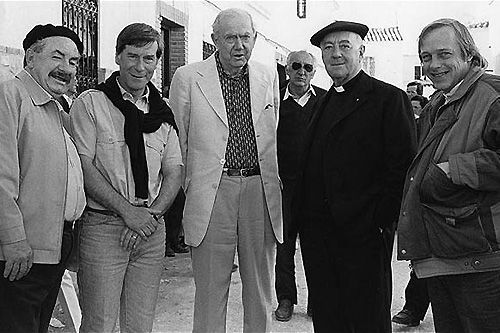
On the set of "Monsignor Quixote", with Graham Greene (center)
Source: Red Bus Records CD (my rip!)
Format: mp3, 320k/s (CBR), DDD Stereo
File Size: 98 MB
Download Link (re-up) – https://mega.co.nz/#!0lkywKjY!EjE5JR6a1EgS2Uut1PloWi0GsXMs4DzuepngTNQ yhhs
Enjoy! Don’t share! Buy the original! 🙂
———- Post added at 03:50 PM ———- Previous post was at 03:34 PM ———-
No.180
The most famous of all "musical illustrations" of Cervantes’s novel completes our short survey:
Don Quixote is a composition by Richard Strauss for cello, viola and large orchestra.
Subtitled Phantastische Variationen ???ber ein Thema ritterlichen Charakters (Fantastic Variations
on a Theme of Knightly Character), it was composed in Munich in 1897. The premiere took place in
Cologne on 8 March 1898, with Friedrich Gr???tzmacher as the cello soloist and Franz W???llner as the
conductor.
The score is 45 minutes long and is written in theme and variations form, with the solo cello representing
Don Quixote, and the solo viola, tenor tuba, and bass clarinet depicting the comic Sancho Panza. The
second variation depicts an episode where Don Quixote encounters a herd of sheep and perceives them
as an approaching army. Strauss uses dissonant flutter-tonguing in the brass to emulate the bleating of
the sheep, an early instance of this extended technique. Strauss later quoted this passage in his music
for Le bourgeois gentilhomme, at the moment a servant announces the dish of "leg of mutton in the
Italian style". All the "episodes" are taken directly from the novel.
Also included is Strauss’s equally famous, but more compact tone poem Don Juan, one of the
composer’s most admired, and most imitated (listen to the Max Steiner score!) symphonic works.
It emphasizes the lyrical and romantic aspect of the title character.
Music Composed by Richard Strauss
Played by the Wiener Philharmoniker
with Franz Bartolomey (cello)
Conducted by Andr??? Previn
"Successful as pianist, composer, and especially as conductor, Andr??? Previn has frequently
bridged the gap between popular and so-called "serious" music, and in doing so broadened the
horizons of both. His father was an accomplished pianist (though a lawyer by profession) and
determined that his son would follow in his musical footsteps. The talented young Andr??? received
instruction on the piano at the Berlin Hochschule, and also absorbed music in a less formal
environment during the many private recitals given in the Previn home. In the mid-1930s the Jewish
family fled to France where Andr??? continued as a scholarship student at the Paris Conservatoire.
In 1939, the Previn family relocated to southern California.
Life was difficult for the family (all their possessions had been left behind in Europe, and Previn’s father
was qualified only in German law), and though barely ten years old, Andr??? supplemented the family income
by accompanying films at movie houses and playing in jazz clubs. At 14 he started working at MGM (Charles
Previn, Andr???’s great uncle, was head of music at Universal Studios), orchestrating and arranging film music,
and slowly saved enough money to study composition with Castelnuovo-Tedesco. At 18 Andr??? was asked to
compose his own full-length film score (The Sun Comes Up, 1949), which resulted in his first experience on
the podium in front of a real orchestra — Previn quickly realized that his future lay in conducting, though he
understood the gulf between film music and serious conducting to be a wide one indeed.
Previn, who had taken U.S. citizenship in 1943, serving in San Francisco during the Korean War, where he had
the opportunity to study conducting with Pierre Monteux. Following discharge from the army, Previn left MGM,
but continued to compose, conduct, and arrange film music throughout the 1950s. He also recorded and
released a series of best-selling jazz albums (something he would continue to do sporadically throughout the decades).
In 1963, having won four Academy Awards in as many years, Previn found the courage to abandon Hollywood and
pursue his dream of becoming a respected conductor. His professional debut occurred that same year with the
Saint Louis Symphony Orchestra, and he spent the next several years traveling around the country conducting
various little-known orchestras in an effort to gain exposure and develop his own skill on the podium. His first
big break occurred in 1967 when he was asked to succeed Sir John Barbirolli as music director of the Houston
Symphony. When offered the job of principal conductor for the London Symphony Orchestra in 1968, Previn left
Houston. During his 11 years with the orchestra (1969-1979) a series of BBC television productions — entitled
Andr??? Previn’s Music Hour — made the LSO (and Previn) a household name around the world. Other conducting
appointments have included the Pittsburgh Symphony, from 1977 to 1985; the Royal Philharmonic Orchestra in
the 1985 and 1986 seasons; and, from 1987 on, the Los Angeles Philharmonic Orchestra. In 1993 he was named
conductor laureate of the London Symphony Orchestra, and he continues to make frequent appearances around
the globe as a guest conductor."
All Music
Source: Telarc CD (my rip!)
Format: mp3, 320k/s (CBR), DDD Stereo
File Size: 136 MB
Download Link (re-up) – https://mega.co.nz/#!0gFCzSBb!CurRjz20qqqs2v63qAOyMGalzhRlmsJBoBMvoOd eFb4
Enjoy! Don’t share! Buy the original! 🙂
English composer Arthur Bliss had a talent for theatrical music, evident in his several ballets and film scores.
These two albums cover his greatest work, A Colour Symphony, as well as two major ballet scores,
Adam Zero and Miracle in the Gorbals, in their entirety, plus several shorter works, including the familiar
15 minute suite from his influential film score Things to Come (1936), the firsth feature film score by a
leading English composer. Stylistically, Bliss’s music presents an intriguing mix of Elgar and Stravinsky, with the latter
more prominent in his youthful works (like the Symphony), and the more regressive Elgar idiom of his autumn years.
Music Composed by Sir Arthur Bliss
Played by the English Northern Philharmonia & the Queensland Symphony Orchestra
Conducted by David Lloyd-Jones and Christopher Lyndon-Gee
"After World War I, Bliss developed an interest in ballet, after seeing the Ballets Russes of Sergei Diaghilev in London.
Bliss composed Adam Zero for the Sadler’s Wells Ballet, in collaboration with Michael Benthall[1] and Robert Helpmann
with whom he had seen success with Miracle in the Gorbals.
The ballet is an allegory of the cycle of man’s life; the world in which he lives is represented by a stage on which a
ballet is being created: Adam is cast as the principal dancer, Omnipotence is represented by the Stage Director
and Adam’s Fates by the Designer, Wardrobe Mistress and Dresser.
Adam falls in love, marries and achieves power. But his triumph is brief; his world crumbles about him, he is
stripped of his glory, and a new generation (Understudy) takes his place. He seeks distraction in dissipation
but everyone deserts him and he is left alone to face Death.
Miracle in the Gorbals (1944) is a one-act ballet choreographed by Robert Helpmann to a story by Michael Benthall,
with music by Arthur Bliss. The setting is the 1940s slums in the Gorbals area of Glasgow. It became a staple of
the Royal Ballet, performed each season from 1944 to 1950 and receiving a revival in 1958.
The idea for the scenario for Miracle in the Gorbals came to Michael Benthall while he was working on a gun site in
Glasgow. He worked on a detailed story and the characters, discussing the action with dancer and choreographer
Robert Helpmann. The next collaborator to be identified was the designer, Edward Burra. The composer Arthur Bliss
set to work on the score, with scenario and initial designs before him.[2] The Royal Ballet performed the ballet every
season from 1944 to 1950 and revived it in 1958,[3] but it did not perform it in Glasgow itself when touring
Scotland in 1945. They also performed the ballet in Paris.
Bliss wrote the music in 1943 after his return from the United States. He created a concert suite from the ballet
music, choosing seven of the fifteen numbers in the ballet, as well as the overture (The Street, The Girl Suicide,
The Young Lovers, The Stranger, Dance of Deliverance, Intermezzo, Finale: The Killing of the Stranger).
The front cloth shows a rainswept ship in a dry dock with vast cranes in the background. The first scene in the
slum is set in the afternoon, with a pub ‘The Shamrock’ on the left and on the right a fish and chip shop ‘Mac’s’;
tenements crowd in on either side. Urchins are playing, but they run off when scolded by a minister. Evening
approaches, and the prostitute comes out, and young men follow her around. The official and the prostitute
meet; he turns away and she goes into a doorway with a young man. A girl enters, but goes off after seeing
a group of drunks. Two lovers come on and dance; the prostitute emerges and tries to entice the man, but
the re-appearance of the official foils her.
An old beggar and some children pass news around a gathering crowd; the official faces the audience. Two
men carry in the body of the suicide. The official crosses her hands and crowd feel the certainty of her death.
A stranger enters, the crowd parts and he is left with the suicide’s body. After he bends over the body, the girl
rises, and she slowly warms to rebirth and starts dancing. The stranger is acclaimed, but the official is disturbed,
resentful of his loss of authority. The stranger blesses the crowd, and he leaves the scene with the revived girl.
The official sends a child to spy on the stranger, when the prostitute walks by. The official follows her up some
stairs as she glories in her success. The people return to the street in excitement at the miracle. The official
comes back down the stairs, and the two lovers say good-night. The urchin brings news back to the official,
and the stranger is sent to the prostitute’s room on a supposed mercy errand. The official poisons the
thoughts of the people, predicting that the stranger will emerge from the prostitute’s room. Although initially
stirred, the crowd are silent when the stranger re-emerges; only the beggar is aware of the plot and retreats
to a doorway. After the stranger has left, the prostitute appears in a more lyrical frame of mind, as if having
visions. The official next summons a gang of thugs, who loiter in dark alleys. As the stranger comes back,
he offers no resistance; they jostle him, slash him with knives and kick him to the ground, where the silence
is broken by the sound of a distant ship siren. The official realises the horror of what he has done. The beggar
goes to help the stranger, and he is joined by the prostitute and the suicide, before the two women leave
the beggar alone with the stranger."
Wikipedia
Source: Naxos CDs (my rips!)
Format: mp3, 320k/s (CBR), DDD Stereo
File Sizes: 173 MB / 160 MB (incl. covers, booklets)
A Colour Symphony, Adam Zero (re-up) – https://mega.co.nz/#!0kl1FbhZ!XIMOJyYT4vccSkVk7kAiBUfonh0VJO2FQHTql-WYccQ
Miracle in the Gorbals, Music for Strings (re-up) – https://mega.co.nz/#!5tF22BxC!dHVylQeG0gKE_LOakvKniXNzjaVcOQYV4gQk0sz vQ-0
Enjoy! Don’t share! Buy the originals! 🙂
Since the first upload of two albums of "British Light Music" went down so well, here’s another album,
this one by the king of light music, Eric Coates.
Coates was perhaps the most important composer of symphonic light music in the first half of the
twentieth century outside the Viennese sphere. He took the music genre and made it into as bona fide
and influential an art form as that created by any member of the Strauss family. He is often regarded
as the Mozart of a music world whose generally light emotional expression is colored by splashy
orchestration and perky rhythms. Yet, his music featured an elegance and aristocratic air and could
capture moods and, in stage works, story lines with deftly vivid imagery. The London Again Suite,
The Three Men Suite, Cinderella Fantasy, Summer Days Suite etc. are all entirely
characteristic of his style.
Music Composed by Eric Coates
Played by the Royal Liverpool Philharmonic Orchestra
Conducted by John Wilson
"The name of Eric Coates has been synonymous with English light music for decades. These works have retained their
popularity worldwide over the years largely because of recordings like this and the Marco Polo British light music series.
Coates is primarily known for his London Suite (unfortunately not recorded here), but the London Again Suite is structurally
similar and may even be better. The second movement Elegie is absolutely gorgeous with its tolling bells, gongs, and organ-
like sonorities. The Selfish Giant reveals a remarkable and not-too-subtle thematic resemblance to a theme from Erich
Wolfgang Korngold’s score for The Sea Hawk, composed several years later. Needless to say this fantasy has an
enchanting, wistful, and very civilized charm. There is even a brief moment of drama at the stroke of midnight in
the Cinderella fantasy.
And so it goes with this collection of delectable works. Recordings of Coates?s music have periodically surfaced over
the years, and most of them are quite good. If a conductor is interested enough to record it, the results are usually fine.
John Wilson and the orchestra take the music seriously, but always maintain a quicksilver light touch and never over inflate it.
The sound is excellent in every way. The orchestra is recorded in a natural concert hall setting with a realistic sense of depth
and none of the artificial instrumental spotlighting that you often hear in crossover collections and film scores. If you like
these charming miniatures and need a new recording, you certainly won?t go wrong here."
Fanfare
Sources: AVIE Records (my rip!)
Format: mp3, 320k/s (CBR), DDD Stereo
File Size: 171 MB
Download Link (re-up) – https://mega.co.nz/#!gl8AGCSS!eYz1QHCnPmskjw6yrqxaaF7LQid53B3OeySUPss A-m8
Enjoy! Don’t share! Buy the originals! 🙂
Alberto Williams was born in Buenos Aires, in 1862. A maternal grandfather, Amancio Jacinto Alcorta, had been a
respected government and banking policy-maker, as well as a well-known composer of sacred music. Williams began
attending a local music school in early childhood and, at age 7, he performed in his first public concert. He received a
scholarship from the Argentine government in 1882 to study music composition at the Paris Conservatoire, where he
was mentored by pianist Georges Mathias and composer C???sar Franck.
The two substantial works on this album belong to the final period of creativity in Williams’s life. Both appear to
be programmatic, but the "Eternal Repose" in the Seventh Symphony (1937) is more elusive than the four
concrete tone pictures that form the Poem of the Iguaz??? Falls (1943). In the latter work, folkloristic Argentinian
elements are more prominent, though, on the whole, Williams’s music harks back to the European tradition, more so
than that of his younger compatriot, Heitor Villa-Lobos.
Music Composed by Alberto Williams
Played by the Orquesta Filarm???nica de Gran Canaria
Conducted by Adrian Leaper
"These are world premiere recordings of works by a composer whose name I knew of but whose music was, until
now, a complete unknown. Williams was known to me from a reference in a battered copy of Slonimsky’s 1940s
book on South American composers.
The notes for this valuable CD are rather sketchy but they do provide some detail. They point out that Williams,
a native of Buenos Aires, wrote music falling into three phases: 1862-1890 reflecting the strong influence of
European models; 1890-1910: an approach to more nationalistic language. 1910-1952 back to more cosmopolitan
models. The works on this disc fall into the last period and are provocative for their musical language in a time of
world conflict. Perhaps some of that sorrow and tragedy appears in the flanking outer movements of the symphony.
The Seventh Symphony, like its disc-mate, is in four movements. The middle two are dance-lead, betraying
the influence of the ballet. The outer movements are more apocalyptic. The first is clearly striving for great
things. The language has something of Scriabin and even more of Miaskovsky. Its quietly chanting music in
La Piramide seems to suggest an enigmatic smile. The next is a fantasy dance movement making quite a
relaxation after the first. The spirit is of a grand age ball in a sophisticated Edwardian hotel. At 3:50 comes
a clearly delineated rhythmic theme of Baxian (Symphony No. 5) accent. By contrast, next follows a solo
violin serenade in which concert master Anatoli Romanov takes up the chattering Baxian theme and spins
it into a counterpart of Vaughan Williams’ Concerto Academico. The breezily vigorous Joueuses De Crotales
(a crotal is a rattle or small spherical bell) is in much the same spirit as the second movement. The finale
ives the symphony its title. Whether Williams had eternity in mind I do not know. It has some of the
enigmatic dreaminess of the first movement. Chant-like, the theme conjures up the image of some
great pagan cathedral. The mood is not too far away from Janis Ivanovs’ impressionistic Atlantis
symphony no. 4. It is also the longest movement at 13:27. This music tells tales of a world where
cold saps the warmth. The spell of these notes testifies to a composer of concentrated inwardness,
of mood and of imagination. This concentration is interrupted at 8:33 by a disruptive brass intervention
which impacts like a comet-strike on this chaste but vaguely threatening world. Then a gust of wind
blows the curtains followed by another militaristic miniature fanfare at 9:35. A stern resolute theme
emerges with a remorselessly marching tread. The symphony ends in jubilant uproar. Some of these
mood-shifts are unnervingly jarring but the moods themselves are quite captivating.
The Poema del Iguazu is a picture-suite of the river Iguazu. The first movement is Las selvas dialogan
con las cataratas (The forest converses with the waterfalls). The movement is low key; rather
light-spirited with snatches of Beethoven, D’Indy and Tchaikovsky. It is propelled along by a patterned
rhythmic theme of cheery Brahmsian/Straussian character. The regally flowing Barcarola sounds
decidedly French. It offers a superb long-breathed tune. Here the strings sound less than luxuriant but,
my, what a lovely theme. Next comes La Luna Ilumina Las Cascadas – a Nocturno. This has an
impressionistic magical feeling paralleling the enigmatics of the first and last movements of the symphony.
The shades and colours are very gentle – pastel darks and shades. I wonder if his apparently famous
Rancho Abandonado sounds like this. The finale depicts a great waterfall (The Devils Throat) with
vigorous panache. The mood is hunting and chivalric (like an Argentinian Froissart) with a full bow
in the direction of Tchaikovsky’s Symphony No. 4."
Music Web
Source: Arte Nova CD (my rip!)
Format: mp3, 320k/s (CBR), DDD Stereo
File Size: 157 MB
Download Link – https://mega.co.nz/#!1gFhGAba!NvHsiCfLD5Sr6XnmZBpNEXqRyvgw3dz49MhlPmK 6-ug
Enjoy! Don’t share! Buy the original! 🙂
Elliott Schwartz was born in 1936 in New York City and studied composition with Otto Luening and
Jack Beeson at Columbia University. He is the Robert K. Beckwith Professor of Music at Bowdoin College,
where he has taught since 1964, including twelve years as department chair.
This CD brings together five substantial pieces, three of which have been written within the space of four
years. The title piece, Voyager, was completed in 2002 and, as is implied, is associated with journeys –
– to the Netherlands, England, Japan and Iceland. In his characteristic way, Schwartz incorporates fragments
of older music on his travels — traditional melodies, and brief quotations from pieces by composers from
those countries as far distant in time as Sweelinck and Josquin, to closer giants like Vaughan Williams,
whose symphonies were the subject of his 1964 book (published by Amherst). From its stirring opening,
Voyager glides over musical territories, rising and falling as if airborne, an impressive piece of
orchestral writing.
Mehitabel’s Serenade (2001) is a concertante work for alto saxophone and orchestra (the agile
soloist is Kenneth Radnofsky for whom the piece was written) and this is another work that travels
through many moods with again one of the Schwartz trademarks — the climactic build.
The short piece Jack O’Lantern was written in 2000 for the Cleveland Chamber Orchestra to
celebrate Halloween, and is representative of the Schwartz wit, starting and ending in darkness to leave
Jack grinning across the rear stage wall.
There are two slightly older pieces: Celebrations/Reflections: A Time Warp for orchestra, written
in 1985 to celebrate his own 50th birthday and 25th wedding anniversary, again uses fragments of past
pieces as well as a Victorian parlour song; and Timepiece 1794 for chamber orchestra, a suite of
three pieces written in 1994 to celebrate Bowdoin College’s bicentennial and using fragments from
music of 200 years ago in a collage of wit and ingenuity.
Schwartz’s music is obviously modern in technique, but it communicates very well (unlike oh-so-much
contemporary music) and is thus accessisble.
Music Composed by Elliott Schwartz
Played by the Slovak Radio Symphony Orchestra of Bratislava & Moravian Philharmonic Orchestra
Conducted by Toshiyuki Shimada & Szymon Kawalla
"This is a most attractive disc. Unlike much modern music, in which one is made uncomfortably aware of
the compositional mechanisms involved, Schwartz has an unusual ability to write accessible, tonal music
while deriving his materials sometimes mathematically or through the use of serial techniques…
[The results]… are integrated into works of such delightful richness of texture amd harmonic invention
that one is not really aware of this at all, hearing instead warmly Romantic music with direct appeal to
the senses and emotions… One comes away from the whole with the impression of serious and expertly
written works by a composer who doesn’t take himself too seriously, (and) who has a light, humorous
touch alongside his seriousness of purpose…."
International Record Guide
Source: Albany Records CD (my rip!)
Format: mp3, 320k/s (CBR), DDD Stereo
File Size: 173 MB (incl. booklet)
Download Link (re-up) – https://mega.co.nz/#!p0UxCIoL!EWBk_hlYPX5GC4abIGYnyzGO_XEI_EJDZLoWKjM Xbpc
Enjoy! Don’t share! Buy the original! 🙂
They make the perfect scenario for the weekend!
A tragic prelude to the Second World War, the Spanish Civil War brought hundreds of thousands of personal
tragedies, many of which touched the Spanish cultural world. The execution of the poet Federico Garc???a Lorca
is well known, but among the victims of the conflict was a promising young composer called Antonio Jos???
Mart???nez Palacios, known in musical circles simply as Antonio Jos???.
Mart???nez Palacios was born on 12th December 1902 in Burgos, then a small city far removed from the
cultural concerns of Madrid or Barcelona. Despite this, the young musician made a name for himself and before
he was twenty was awarded a grant to continue his studies in Madrid.
The Sinfon???a castellana gives us many clues to an understanding of the work of Antonio Jos???: borrowings
from folk-music, elegant orchestration, a taste for colour and elements taken from French impressionism.
Antonio Jos???’s opera El mozo de mulas, based on an episode from Don Quixote (Part One, ch. XLIII),
remained unfinished at his death. Begun in his M???laga years, the vocal/piano score was complete, but the opera
was only partially orchestrated, a task completed by Alejandro Yag???e in 1992. In 1934, however, the
composer had presented the Preludio y Danza popular (Prelude and Folk-Dance), two extracts from the opera
signalling his return to orchestral writing. They were first performed that same year in Madrid.
Evocaciones, a piece clearly rooted in folk-music, dates from 1928. Its principal theme is that of a song
from Burgos, Juan se llama mi amante (My lover’s name is John), from the Olmeda anthology. It first
appears as if from a great distance, then gradually builds up its presence, with a slow dance tune, until the climax,
underpinned by the percussion.
Music Composed by Antonio Jos???
Played by the Castile and Le???n Symphony Orchestra
With Alberto Rosado (piano)
Conducted by Alejandro Posada
"Sadly, this disc apparently contains just about all of the orchestral music that Antonio Jos??? wrote.
His full name was Antonio Jos??? Mart???nez Palacios, and he was executed in 1936 during the Spanish Civil War,
just 34 years old. He clearly was a talent to be reckoned with. Sinfonia castellana is gorgeous: a rich
amalgam of folk music, impressionistic harmony, and Falla’s soulfulness in four ingratiating movements. Its
style is similar in character to Debussy’s Nocturnes or Images for Orchestra, or perhaps Falla’s Nights in the
Gardens of Spain, and if you love that music (and what sane person doesn’t?), you’ll have to own
this disc as well.
The other works all share this same basic vocabulary and so don’t need to be described in detail.
Evocaciones, whose subtitle "Sketches of country dancing" certainly speaks for itself, is especially lovely.
At the time of his death Jos??? was working on an opera, El mozo de mulas, which he completed in piano
score, orchestrating the two numbers included here. The March of the lead soldiers is a piano piece scored
in 1988 by Alegjandro Yag???e, while the Suite ingenua, for piano and strings, is a charming miniature in
three movements. The performances are all excellent. Alberto Rosado’s piano sounds a touch tinny in the
Suite ingenua, but conductor Alejandro Posada makes a very persuasive case for the composer’s creative
talent and is clearly inside the idiom. Vivid sonics illuminate Jos???’s real gift for evocative scoring. An
unusually beautiful disc."
Classics Today http://i1084.photobucket.com/albums/j415/wimpel69/p9s9-2.gif
Source: Naxos CD (my rip!)
Format: mp3, 320k/s (CBR), DDD Stereo
File Size: 124 MB (incl. booklet)
Download Link (re-up) – https://mega.co.nz/#!Q0cllBrA!eAeMaXjt0TzCRgQDWOhkFR9p6M5HqMeY1SUz_z-Fc_Q
Enjoy! Don’t share! Buy the original! 🙂
———- Post added at 01:39 PM ———- Previous post was at 12:57 PM ———-
No.186
Philip Sainton was born into a successful musical family: his grandfather was the famous
French violinist Philippe Prosper Sainton who married Helen Dolby, the English contralto for
whom Mendelssohn wrote the contralto solo in Elijah. Sainton confined his creative output almost
exclusively to a series of short orchestral works and a number of songs. In 1956,
however, he completed an elaborate score for John Huston’s film Moby Dick. Today it comes
as a surprise to discover that his music was once widely played by orchestras such as the
HaII??? Orchestra, BBC orchestras, Queen’s Hall Orchestra, Scottish National Orchestra and
New York Philharmonic.
The tone poem The Island was dedicated to ‘my very good friend, Ernest Hall’ (the trumpet
player) and first performed in 1942 by the BBC Symphony Orchestra in a studio broadcast. Although
his favourite modern composer was Ravel, the overt influences on The Island are
Delius (Song of the High Hills) throughout, and in the powerful central development section
the Korngold of Die tote Stadt and especially the Suk of Ripening. The last two influences
are suppositions based on the music itself; research has yet to show how well Sainton
knew these works. The orchestration is rich and translucent, a lot like Bax. The opening
fanfare is hauntingly reminiscent of the Moby Dick main theme music.
Patrick Hadley was born in Cambridge where his father was Master of Pembroke College.
After studying at Winchester and Pembroke, he saw active service in France where injuries
sustained in 1918 necessitated the amputation of a leg below the knee. Whatever
the emotional scars Hadley retained, he never accepted any physical limitations. After the war he
studied composition with Ralph Vaughan Williams at the Royal College of Music.
The melodic framework for Hadley’s Symphonic Ballad in A minor The Trees So High, is built on a
folksong from Somerset, which forms the basis of the four linked movements. All the thematic
material is derived from elements of the main melody. Hadley likened his technique in this
work to ‘three independent brooks which flow into one stream at the beginning of the finale’.
The melodic framework for Hadley’s earliest work on these two CDs, the Symphonic Ballad
in A minor The Trees So High, is built on a folksong from Somerset, which forms the basis
of the four linked movements. All the thematic material is derived from elements of the main
melody. Hadley likened his technique in this work to ‘three independent brooks which flow
into one stream at the beginning of the finale’.
Music Composed by Philip Sainton and Patrick Hadley
Played by The Philharmonia Orchestra & Chorus
With David Wilson-Johnson (baritone)
Conducted by Matthias Bamert
"The two composers represented share a fine feeling for the orchestra. Sainton is more of a dramatist
and a poet of atmosphere. He is quite Baxian and The Island is a classic tone poem. The sea is a strong
presence, subtle in poetry but unmistakable in allusion. Green depths and the surge and swell of the main
are clearly conveyed. A Tintagel-like pulse can be heard at 4.34. The trumpet sings out strongly above
the orchestra, heroic and determined. This is a fine work – I have always thought so since encountering
it in an outstanding performance conducted by Charles Groves in a 1951 BBC broadcast.
Patrick Hadley was a scion of the Royal College of Music rather than the Sainton’s Royal Academy. Hadley
had a gentle and pellucid orchestrational hand. When combined with the pastoral tradition, as here, his
music can be powerful indeed. As a symphonic ballad the work seems caught between symphonic gravity
and the piercing emotionalism of song. The work has been written of as ‘problematic’. I do not see the
problem. It is a work of Ravelian clarity, with the power to vibrate the heart strings, to draw tears. As Lewis
Foreman says, it has the grip of a piece written from internal compulsion rather than conscious contrivance.
Mr Foreman links it with Hadley’s experience of the Great War, a war which brought about amputation of a
leg below the knee. The same war also killed Hadley’s brother – a parallel here with Arthur Bliss whose
own brother Kennard was killed in the trenches and with Eugene Goossens whose brother Adolf was also
killed. Can anyone resist the gentle Delian flute song at 3.00. It is superbly nurtured and caressed through
to the solo violin at 3.25 in tr. 4. These earlier movements (trs 2-3) touch on another Haldey composition,
the deeply moving Scene from ‘The Woodlanders’. Hardy’s power is certainly a presence here. The heaving
tortured climax at 1.33 in the penultimate track has a bombshell power that recalls the rousing eruptive
brass ‘shout’ in Shostakovich 15. The piercing shriek of the strings thrusts the message home with a power
that transcends gentle and soft-edged landscapes."
Music Web
Source: Chandos CD (my rip!)
Format: mp3, 320k/s (CBR), DDD Stereo
File Size: 121 MB (incl. booklet)
Download Link (re-up) – https://mega.co.nz/#!R1djjKRC!F3xXdy6PfUI-hdmGITI1axuTmMYaQ1AXG6PZSUtQN-4
Enjoy! Don’t share! Buy the original! 🙂
I heve been looking for it for a long time!
This will be a sleepless weekend!…:-)
Although George Chadwick began the Symphonic Sketches in 1895, the work was not completed
until 1904. Comprising four movements entitled ‘Jubilee’, ‘No???l’, ‘Hobgoblin’ and ‘A Vagrom Ballad’ respectively, it is,
in effect, the composer’s Fourth Symphony, although it departs from his earlier three symphonies in a number of
important ways, e.g. because of their somewhat programmatic content. Chadwick attempted to evoke moods
which reflect the lines of poetry that preface each movement.
Chadwick was finishing his studies with Josef Rheinberger in Munich when the Harvard
Musical Association, far back home, performed his Rip Van Winkle in December 1879. A
review appeared in the Musical Record, proclaiming the new overture ‘a treat… The
work is quite melodious, and is remarkable for its rich and full instrumentation. It achieved a
great success for its composer, who gives promise of a brilliant future.’ The review
continues, ‘While we accord the full credit to the Association for its recognition of this
composer’s ability, we wonder if this work would have been given by them if it had not
previously received the stamp of approval of Leipsic.’ Perhaps not, but the story behind the
piece, if not the music itself, is thoroughly American.
Two years after Chadwick returned to Boston, he began a series of overtures named
after the Muses, which he developed over the next two decades. Thalia, celebrating the Muse
of comedy, was the first, and it delighted the critics. Melpomene, representing the Muse of
tragedy, and first performed in 1887, departed from the American strain that had
marked some of Chadwick’s other recent works. The harmonies are chromatic, and there
is an unambiguous reference to the ‘Tristan’ chord near the beginning.
If Chadwick eschewed musical storytelling in his three overtures dedicated to the Muses
(Euterpe, in 1903, completed the set) he embraced it in his symphonic ballad
Tam O’Shanter. According to Chadwick’s biographer Victor Fell Yellin, Tam is best
understood as a ‘cultural statement’ as well as the most detailed tone poem the composer
ever wrote. ‘It was a reaffirmation of an ethnicity based on and supporting common
American–British values during a period of chaotic change in the United States,’ he writes.
‘The piece represents not only the work of the most identifiably American composer to date,
but also an English-speaking tradition that transcendes geographical boundaries.’
Music Composed by George W. Chadwick
Played by the Detroit Symphony Orchestra
Conducted by Neeme J???rvi
"This collection gathers Neeme J???rvi’s previously released George Chadwick recordings on
one disc. Though Chadwick aimed to distinguish himself as a uniquely American composer, his
symphonic poems nonetheless reflect the influence of similar works by then-prominent Europeans.
Melpomene, for instance, owes much to Tchaikovsky in its dramatic sweep and emotionally intense
melodies, while Dvor???k’s nature-painting style can be discerned in Rip Van Winkle, and even more
so in the joyously frenzied Jubilee from the Symphonic Sketches, which replicates the Czech
composer’s Carnival overture. However, Chadwick moves away from continental influences in
Tam O’Shanter, which is steeped in the folk coloring of its Scottish subject.
Nevertheless, Chadwick’s skillfully constructed and handsomely orchestrated music is all his own,
and it exudes a vitality that’s quite affecting. J???rvi offers compelling interpretations and gets the
Detroit Symphony players to muster more enthusiasm and panache than they display on some of
their standard-repertoire recordings. Chandos presents it all in spacious, clear, and nicely reverberant
sound. If you’re new to Chadwick’s music, be prepared for a treat."
Classics Today http://i1084.photobucket.com/albums/j415/wimpel69/p9s9-2.gif
Source: Chandos CD (my rip!)
Format: mp3, 320k/s (CBR), DDD Stereo
File Size: 163 MB (incl. cover, booklet)
Download Link (re-up) – https://mega.nz/#!8U1F2ayJ!Nv5wVIHQdGs7nQ3p7TgMZ2-CJ7t0279_xX3z7-MJDx8
/>
Enjoy! Don’t share! Buy the original! 😉
An entertaining collection of French works for small orchestra, from Maurice Ravel’s
Le Tombeau de Couperin over Claude Debussy’s Danses sacr???e et profanes,
Gabriel Faure’s playful Dolly Suite to Jacques Ibert’s spunky Divertissement.
Music by Maurice Ravel, Claude Debussy, Gabriel Faur??? & Jacques Ibert
Played by the Academy of St. Martin in the Fields
Conducted by Sir Neville Marriner
"Rivaled only by Nikolaus Harnoncourt, Neville Marriner was one of the most important of the early
figures who spearheaded the reawakening of modern interest in Baroque and early Classical music.
In the 1950s, he founded Academy of St. Martin-in-the-Fields, the first British early music ensemble to
find a large international audience. Marriner has since become one of the most popular conductors in
the world, acclaimed for his interpretations of composers from Bach to Britten.
Marriner was first taught the violin as a child, by his father, and attended the Royal College of Music,
beginning at age thirteen. Wounded during World War II, he met future collaborator Thurston Dart
during his hospitalization. In 1948 he became professor at the Royal Academy of Music. As well as
joining the Martin String Quartet as second violin, he formed a violin-and-harpsichord duet with Dart,
and their performances led to the formation of the Jacobean Ensemble, an early music group that
recorded the Purcell trio sonatas in 1950. Around this time, he began studying conducting with Pierre
Monteux at Monteux’s school in Maine. Marriner’s reputation in general music circles also grew; in
1956 he was appointed principal second violin with the London Symphony Orchestra.
A turning point came in 1959, when Marriner was asked to supply music for the church of St.
Martin-in-the-Fields, in London’s Trafalgar Square. Marriner formed a chamber orchestra which he
named the Academy of St. Martin-in-the-Fields. The group’s work attracted the attention of the Decca
imprint L’Oiseau Lyre, which recorded its performance of Couperin’s Les Nations. Favorable reviews and
unexpectedly robust sales of this recording led to more recordings for L’Oiseau Lyre and its sister
label Argo, and by the end of the 1970s the Academy of St. Martin-in-the-Fields had become the
best-selling chamber orchestra in recorded music’s history. The group expanded from 13 players to
twenty or more, and performed Classical symphonic works and twentieth century British music as
well as Baroque material. The sound of Marriner’s Academy recordings is crisp, with an extremely bright
sound, using period performance standards with modern instruments. Marriner’s name remains closely
associated with the Academy of St. Martin-in-the-Fields, and the group now has more than 300
recordings to its credit. These include the soundtrack for the 1984 film Amadeus, for which Marriner
selected, arranged, and directed works of Salieri and Pergolesi, in addition to Mozart.
In 1969 Marriner he organized the Los Angeles Chamber Orchestra, and he later took this orchestra
on a tour of Europe. Additionally, he served as a guest conductor with leading U.S. orchestras, and
in England held an appointment as conductor of the Northern Sinfonia, based in Newcastle. In the
late 1970s and early 1980s, he spent most of his time in the U.S., primarily as music director and
conductor of the Minnesota Orchestra. After being knighted in 1985, Marriner went back to Europe,
conducting of the Stuttgart Radio Symphony Orchestra from 1986-1989. Since then, he has
conducted around the world, including at the Op???ra de Lyon, and continues to record.
His conducting is known for its vitality and brightness, as well as precise ensemble technique, a
reflection of his violinist days. In a 1991 interview he said of his style: "I was never a potentate
swinging a scepter, but was always in a dialogue with my musicians."
Marriner bio
Source: ASV CD (my rip!)
Format: mp3, 320k/s (CBR), DDD Stereo
File Size: 138 MB
Download Link (re-up) – https://mega.co.nz/#!gpNTHRCK!TBz2Lw2WM6Kem2OtqUOI_l99rE9fUngKtBrxYrG kOIQ
Enjoy! Don’t share! Buy the original! 🙂
Thanks a lot!
Gordon Getty is a neo-romantic contemporary American composer. And yes, as the name implies,
he’s a member of the obnoxiously welathy Getty clan, so he does not have to compose music for a living.
However, he should also not be mistaken for a "hobby" or amateur composer. Nothing about his music
is amateurish. In fact, the two symphonic suites (Homework- and Ancestor Suite), as well as
Raise the Colors, The Fiddler, the Overture Plump Jack, and Tiefer und Tiefer,
are colorful, entertaining and appealingly scored. While Getty is best known for his inspired vocal works,
he proves himself to be a versatile and resourceful orchestral composer with this album.
Music Composed by Gordon Getty
Played by the Academy of St. Martin in the Fields
Conducted by Sir Neville Marriner
"Gordon Getty, who describes himself as “two-thirds a 19th-century composer,” is nevertheless a creative and
original one and, as this CD proves, the other one-third makes its presence felt often enough to provide
interest and flexibility.
The CD opens with the overture to his opera Plump Jack, based on Shakespeare’s Falstaff, and it succinctly
summarizes the fat knight’s journey from fellow mischief-maker of Prince Hal to his being banished by Hal
when the latter becomes King Henry V. As such, it does its job very well and thus can stand on its own as a
concert piece sans opera. If I have one reservation about it, in fact, it is that it seems to me to work better
as a tone poem than an overture. It goes through several tempo and key changes in its journey, shifting
its moods and story with interest and a rich palette of orchestral colors.
Ancestor Suite is a ballet loosely based on Edgar Allan Poe’s The Fall of the House of Usher, premiered in
Moscow in 2009. Here, Getty’s music is not so resolutely tonal, but rather points up the macabre aspects of
Poe’s story with relish. Divided into 11 sections, the suite focuses, appropriately, on dances (waltzes, a
Schottische, polka, gavotte, and march), but always with eerie overtones. In the opening waltz, for instance,
one hears a fragmenting of both the melody and its orchestration in a way that harkens back to Stravinsky’s
neoclassic period as well as Copland. The “Waltz of the Ancestors” has a sort of clumsy, galumphing
quality reminiscent of the “Dance of the Knights” in Prokofiev’s Romeo and Juliet. The Schottische dances
its way through ambiguous tonality (also like Prokofiev) while the Waltz-L???ndler has a fragmented, almost
uncertain quality to it. The theme representing Madeline Usher, the mad but pure member of the family,
has a tender but skewered quality to it, not unlike portions of Copland’s Rodeo. Getty’s music always seems
to be on the verge of a tune, but his restless and quite original sense of imagination keeps such tunes
from developing and thus running the risk of becoming cloying. Getty’s music is very “open,” both in
form and orchestration, which creates a moment-to-moment fascination, and even in this ballet score,
a wry sense of humor.
Tiefer und Tiefer (Deeper and Deeper), given here in Getty’s arrangement for string orchestra, is
also used in his Three Waltzes for Piano and Orchestra. Melodically, it is quite simple; harmonically, it is
quite discursive, composed of six-bar segments that shift tonality at or within almost every phrase. Homework
is an orchestrated version of one of his earliest piano pieces, written in 1964 while he was still a student.
One can hear quite clearly here his musical debts to Copland and Thomson, and if the music is less developed
than his later works it certainly has charm in abundance. The Fiddler of Ballykeel and Raise the Colors are
exuberant, outgoing, celebratory works in regular rhythms and full orchestral colors, a fitting conclusion
to this CD.
The performances by Neville Marriner and the Academy of St. Martin in the Fields display this orchestra’s
metamorphosis from its chamber roots in the 1960s to its more robust sound today. PentaTone’s sound,
undeniably resonant as a result of SACD mastering, is nevertheless clear and transparent at all times."
Fanfare
Source: Pentatone SACD (my rip!)
Format: mp3, 320k/s (CBR), DDD Stereo
File Size: 166 MB (incl. cover, booklet)
Download Link (re-up) – https://mega.co.nz/#!hwt13CiS!OntrOyqKCw_ghAv8IjF2i0JUWc0YiHNx1hy3OnH 2bhk
Enjoy! Don’t share! Buy the original! 🙂
Joly Braga Santos was born in Lisbon in 1924 and died there in 1988, at the height of his musical creativity.
Although he composed only six symphonies, he was undoubtedly the leading Portuguese symphonist of the
century and, in a way, of all time. Apart from an innate sense for good orchestration, his musical language
is based on a strong sense of musical architecture as well as drama, with long melodic lines and a natural
instinct for structural development as well as formal coherence. In his own words, he wanted to contribute
“toward a Latin symphonism and to react against the predominant tendency, of the generation that
preceded me, to reject monumentalism in music”.
The ballet Alfama justifies a personal note on my part. Having been a very close friend of Joly (as everyone in
Portugal still calls him), I was greatly surprised when, at the end of the ceremony held a year ago on the occasion
of the public deposit of his original manuscript scores at the National Library of Portugal, in Lisbon, I inspected
some of the works on display, and saw a large volume, clearly an orchestral score titled Alfama. It struck me that I
had never heard of a work by Joly named after the Arab neighbourhood surrounding the mediaeval Castle of St
George in the centre of Lisbon, part of which can be seen in the photograph reproduced on the front cover of this
booklet. Unable to open the score and look at the music, on my drive home I called Joly’s wife, Maria Jos???, and
asked her what kind of work it was, when it was written, and what it was like. “Oh”, she said, “forget it. When we
were about to get married, Joly was short of money, so he agreed to write the music for a ballet. He wrote it in haste,
and after a first performance he dismissed it, considering it bad, unworthy to be performed.” While this explained
why I had never heard of the work, Maria Jos???’s answer did not convince me. “Joly was unable to write bad
music!” I told her.
???lvaro Cassuto
Music Composed by Joly Braga Santos
Played by the Royal Scottish National Orchestra
Conducted by ???lvaro Cassuto
"This is the first Braga Santos disc on Naxos and the first time—on disc—the Royal Scottish National
Orchestra have played it. Unsurprisingly, this is very assured all round with the orchestra sounding
unfussily good. They are caught in healthy sound at the acoustically dependable Henry Wood Hall
Glasgow by the reliable team of producer Andrew Walton and engineer Phil Rowlands.
The first work is the Symphonic Overture No. 3. That is a slightly dry title for an instantly appealing
work which while consisting of original themes clearly breathes Iberian air. As with so much Braga Santos,
there is strong melodic memorability here allied to open and effective scoring. After a slow introduction
the main theme flows with an appealing gallant sweep supported by an insistent side-drum and brass
flourishes. The essential mood is vivacious and joyful although the big climax a minute or so from the
end is impassioned and powerful. There is something faintly cinematic about the music but it sets out
to please and is wholly successful.
The earliest work on the disc comes next and is much more austere and indeed sombre. It is the
Elegy in memory of Vianna da Motta. Jos??? Vianna da Motta was one of Liszt’s last piano pupils.
Quite what direct link inspired the Braga Santos composition is not clear but it resulted in an impressive
ten minute eulogy. The central section is a powerful lamenting cortege that builds over muffled drums
to an assertively emotional climax before sinking back to the musing opening—a lovely cor anglais
solo entwined with sonorous violas.
The longest work here receives its world premiere recording. It is a suite assembled by ???lvaro Cassuto
from the ballet Alfama. It’s well-crafted, easy on the ear music that does the job required of it.
This disc encapsulates the ability of Naxos to produce discs of considerable technical, artistic and
musical merit of repertoire even knowledgeable collectors have never encountered before.
This is a high quality disc displaying an impressive range of musical styles."
Music Web
Source: Naxos CD (my rip!)
Format: mp3, 320k/s (CBR), DDD Stereo
File Size: 187 MB (incl. cover, booklet)
Download Link (re-up) – https://mega.co.nz/#!MhljiDxI!DCBsNEnBvER7uFFHjt_sqiA0KZw-lchzUUWp6ff-bSg
Enjoy! Don’t share! Buy the original! 🙂
An American original!
Contrary to my initial intentions, I am now going to present 10 outstanding, potentially more familiar program
works in the countdown to post No.200, each one in a reference interpretation.
Daphnis et Chlo??? is a ballet with music by Maurice Ravel. Ravel described it as a "symphonie chor???ographique"
(choreographic symphony). The scenario was adapted by Michel Fokine from an eponymous romance by the
Greek writer Longus thought to date from around the 2nd century AD. Scott Goddard published a contemporary
commentary that discussed the changes to the story that Fokine made to prepare a workable ballet scenario.
The story concerns the love between the goatherd Daphnis and the shepherdess Chlo???. The ballet is in one
act and three scenes.
Ravel began work on the score in 1909 after a commission from Sergei Diaghilev. It was premiered at the Th??????tre
du Ch???telet in Paris by his Ballets Russes on June 8, 1912. The orchestra was conducted by Pierre Monteux,
the choreography was by Michel Fokine, and Vaslav Nijinsky and Tamara Karsavina danced the parts of
Daphnis and Chloe. L???on Bakst designed the original sets.
At almost an hour long, Daphnis et Chlo??? is Ravel’s longest work. In spite of the ballet’s time length, a small
number of musical leitmotifs gives musical unity to the score.[1] [2] The music, some of the composer’s most
passionate, is widely regarded as some of Ravel’s best, with extraordinarily lush harmonies typical of the
impressionist movement in music. Even during the composer’s lifetime, contemporary commentators described
this ballet as his masterpiece for orchestra.[3] He extracted music from the ballet to make two orchestral
suites, which can be performed with or without the chorus. The second of the suites, which includes much
of the last part of the ballet and concludes with the "Danse generale", is particularly popular. When the
complete work is itself performed live, it is more often in concerts than in staged productions.
Music Composed by Maurice Ravel
Played by the Berliner Philharmoniker
Conducted by Pierre Boulez
"Part I
A meadow at the edge of a sacred wood. In the background, hills. To the right, a grotto, at the entrance of which,
hewn out of the rock, is an antique sculpture of three Nymphs. Somewhat toward the background, to the left,
a large rock vaguely resembles the form of the god Pan. In the background sheep are grazing. A bright spring afternoon.
When the curtain rises, the stage is empty. Introduction and religious dance. Youths and girls enter, carrying gifts for
the Nymphs in baskets. Gradually the stage fills. The group bows before the altar of the Nymphs. The girls drape the
pedestals with garlands. In the far background, Daphnis is seen following his flock. Chloe joins him. They proceed toward
the altar and disappear at a bend. Daphnis and Chloe enter at the foreground and bow before the Nymphs. The dance
ceases. Tender emotion on seeing the couple. The girls entice Daphnis and dance around him. Chloe feels the first
twinges of jealousy. At that moment she is swept into the dance of the youths. The cowherd Dorcon proves to be
especially bold. Daphnis in turn seems upset. General dance. At the end of the dance, Dorcon tries to kiss Chloe.
She innocently offers her cheek. But with an abrupt motion Daphnis pushes aside the cowherd and approaches Chloe
affectionately. The youths intervene. They position themselves in front of Chloe and gently lead Daphnis away. One
of them proposes a dance contest between Daphnis and Dorcon. A kiss from Chloe will be the victor’s prize. Dorcon’s
grotesque dance. The group sarcastically imitates the clumsy movements of the cowherd, who ends his dance in
the midst of general laughter. Daphnis’s light and graceful dance. Everyone invites Daphnis to accept his reward.
Dorcon comes forward as well, but he is chased off by the group, accompanied by loud laughter. The laughter
ceases at the sight of the radiant group formed by the embracing Daphnis and Chloe. The group withdraws,
taking along Chloe. Daphnis remains, immobile, as if in ecstasy. Then he lies facedown in the grass, his face in
his hands. Lyceion enters. She notices the young shepherd, approaches, and raises his head, placing her hands
over his eyes. Daphnis thinks this is a game of Chloe’s. But he recognizes Lyceion and tries to pull away. Lyceion
dances. As though inadvertently, she drops one of her veils. Daphnis picks it up and places it back on her shoulders.
She ironically resumes her dance, which, at first more languorous, becomes steadily more animated until the end.
Another veil slips to the ground, and is again retrieved by Daphnis. Vexed, she runs off mocking him, leaving the
young shepherd very disturbed. Warlike sounds and war cries are heard, coming nearer. In the middleground,
women run across the stage, pursued by pirates. Daphnis thinks of Chloe, perhaps in danger, and runs off to
save her. Chloe hastens on in panic, seeking shelter. She throws herself before the altar of the Nymphs, beseeching
their protection. A group of brigands burst onstage, see the girls, and carry her off. Daphnis enters looking for Chloe.
He discovers on the ground a sandal that she lost in the struggle. Mad with despair, he curses the deities who were
unable to protect the girl, and falls swooning at the entrance of the grotto. An unnatural light suffuses the landscape.
A little flow shines suddenly from the head of one of the statues. The Nymph comes to life and descends from her
pedestal. The second Nymph. The third Nymph. They consult together and begin a slow and mysterious dance.
They notice Daphnis. They bend down and dry his tears. They revive him and lead him toward the large rock.
They invoke the god Pan. Gradually the form of the god is outlined. Daphnis prostrates himself in supplication.
The stage goes dark.
Part II
Voices are heard from offstage, at first very distant. Distant trumpet calls. The voices come nearer. A dull glimmer.
We are in the pirate camp. Very rugged seacoast. In the background, the sea. To the right and left, a view of large
crags. A trireme is seen near the shore. Cypresses here and there. Pirates are seen running to and fro carrying plunder.
More and more torches are brought, which finally illuminate the scene violently. Bryaxis commands that the captive be
brought. Chloe, her hands tied, is led in by two pirates. Bryaxis orders her to dance. Chloe’s dance of supplication. She
tries to flee. She is brought back violently. Despairing, she resumes her dance. Again she tries to escape. She is again
brought back. She abandons herself to despair, thinking of Daphnis. Bryaxis tries to carry her off. She beseeches.
The leader carries her off triumphantly. Suddenly the atmosphere seems charged with strange elements. In various places,
lit by invisible hands, little flames flare up. Fantastic beings crawl or leap here and there. Satyrs appear from every side
and surround the brigands. The earth opens. The fearsome shadow of Pan is outlined on the hills in the background, making a
threatening gesture. Everyone flees in horror.
Part III
The scene seems to dissolve. It is replaced by the landscape of the first part at the end of the night. No sound but the
murmur of rivulets produced by the dew that trickles from the rocks. Daphnis is still stretched out before the grotto of the
Nymphs. Gradually the day breaks. The songs of birds are heard. Far off, a shepherd passes with his flock. Another shepherd
cross in the background. A group of herdsmen enters looking for Daphnis and Chloe. They discover Daphnis and wake him.
Anxiously he looks around for Chloe. She appears at last, surrounded by shepherdesses. They throw themselves into each
other’s arms. Daphnis notices Chloe’s wreath. His dream was a prophetic vision. The intervention of Pan is manifest. The
old shepherd Lammon explains that, if Pan has saved Chloe, it is in memory of the nymph Syrinx, whom the god once loved.
Daphnis and Chloe mime the tale of Pan and Syrinx. Chloe plays the young nymph wandering in the meadow. Daphnis as
Pan appears and declares his love. The nymph rebuffs him. The god becomes more insistent. She disappears into the reeds.
In despair, he picks several stalks to form a flute and plays a melancholy air. Chloe reappears and interprets in her dance the
accents of the flute. The dance becomes more and more animated and, in a mad whirling, Chloe falls into Daphnis’s arms.
Before the altar of the Nymphs, he pledges his love, offering two sheep. A group of girls enters dressed as bacchantes,
shaking tambourines. Daphnis and Chloe embrace tenderly. A group of youths rushes onstage. Joyful commotion."
Source: Deutsche Grammophon CD (my rip!)
Format: mp3, 320k/s (CBR), DDD Stereo
File Size: 151 MB
Download Link (re-up) – https://mega.co.nz/#!Mok0jJya!JOpmSHsefc1QlhfpC47HZC7AreN-k0_6Yc9X5xGglcg
Enjoy! Don’t share! Buy the original! 🙂
Free File Hosting – Online Storage; Upload Mp3, Videos, Music. Backup Files (http://www.peejeshare.com/files/363320297/Daphnis_et_Cloe.zip.html)
I own the Martinon too (ORTF), but the playing of the orchestra does not stand comparison with that of the Berlin Philharmonic, nor do the 1970s French sonics. As such, the Martinon is not a reference version in those two regards.
Boulez, too, is a Frenchman of course, as is the third contender in the "Daphnis" field, Charles M???nch (an Alsatian).
For people who actually LOVE classical music, there’s a fresh breath of air every new day.
———- Post added at 07:00 PM ———- Previous post was at 06:03 PM ———-
No.192
Contrary to my initial intentions, I am now going to present 10 outstanding, potentially more familiar program
works in the countdown to post No.200, each one in a reference interpretation.
To some, Giuseppe Sinopoli wasn’t even a professional conductor. Once, famously, the Berlin Philharmonic refused
to record a Mahler cycle with him – "not with that guy", an orchestra spokesman told a record company executive.
Eventually, he did record a Mahler cycle, but with different orchestras.
However, Sinpoli had a great sense for the theatrical (certainly the day he died, in the middle of a performance of
Carmen at the Dresden State Opera!), which served him well in a number of his recordings – especially on this album
of two superb programmatic works by Arnold Schoenberg, which the inventor of the 12-tone system
composed befoe he turned his back on tonality. As such, both the sprawling Pell???as and Melisande, based on
the play by Maurice Maeterlinck that inspired many an artist, and the super-subtle Verkl???rte Nacht (Transfigured Night –
originally set for string sextet, later re-arranged for full string orchestra, as recorded here), are prime examples of
fin-de-si???cle Viennese late romanticism. Sinopoli takes Pell???as to extremes, his version is the most leisurely on record,
but it always holds the attention – which is no mean feat in a work like this. Likewise, in Verkl???rte Nacht, the emphasis
is one the almost overripe beauty of the string sound, compared to the austere, sharper-edged sextet of the original.
Music Composed by Arnold Schoenberg
Played by the Philharmonia Orchestra
Conducted by Giuseppe Sinopoli
"Pell???as and M???lisande is a Symbolist play by Maurice Maeterlinck about the forbidden, doomed
love of the title characters. It was first performed in 1893.
The work was very popular. It was adapted as an opera by the same name and set to music by the composer Claude
Debussy, who had the first performance in Paris in 1902. The play inspired other contemporary composers, for instance,
Gabriel Faur???, Arnold Schoenberg, and Jean Sibelius.
Golaud discovers M???lisande by a stream in the woods. She has lost her crown in the water but does not wish to retrieve it.
They marry, and she instantly wins the favor of Ark???l, Golaud’s grandfather and king of Allemonde, who is ill. She falls in
love with Pell???as, Golaud’s brother. They meet by the fountain, where M???lisande loses her wedding ring. Golaud grows
suspicious of the lovers, has his son Yniold spy on them, and discovers them caressing, whereupon he kills Pell???as and
wounds M???lisande. She later dies after giving birth to an abnormally small girl.
The main theme is the cycle of creation and destruction. Pell???as and M???lisande form a bond of love, which, step by step,
cascades to its fatal end. Maeterlinck had studied Pythagorean metaphysics and believed that human action was guided
by Eros (love/sterility) and Anteros (revenge/chaos). The juxtaposition of these two forces brings about a never-ending
cycle of calm followed by discord and then change. Pell???as and M???lisande are so much in love that they disregard the
value of marriage, provoking the ire of Anteros, who brings revenge and death, which restores order."
Source: Deutsche Grammophon CD (my rip!)
Format: mp3, 320k/s (CBR), DDD Stereo
File Size: 184 MB
Download Link (re-up) – https://mega.co.nz/#!JktEQbaC!bm3z1k_CTt7J3Wr2sS6MM3sgyE4V5swpjG1lJYe 7_ps
Enjoy! Don’t share! Buy the original! 🙂
Contrary to my initial intentions, I am now going to present 10 outstanding, potentially more familiar program
works in the countdown to post No.200, each one in a reference interpretation.
I admit that picking American conductor Henry Lewis’s London accounts of Richard Strauss’s
famous tone poems Also Sprach Zarathustra (of 2001: A Space Odyssey fame).
Don Juan and Till Eulenspiegel’s Merry Pranks over heavy competition from Fritz Reiner,
Rudolph Kempe, Andr??? Previn, Herbert von Karajan, Georg Solti, David Zinman and many others may
appear odd. Who remembers Henry Lewis? Well, actually, that’s one of the reasons I selected these
mid-1960s recordings, made originally for Decca and briefly resurrected by Castle Communications in the
twenty years later.
Henry Lewis was the first African-American to hold a post as music conductor of a major US orchestra,
the New Jersey Symphony. Against the odds, his career took flight at the time these recordings were made,
when Lewis had already conducted all the "majors", like the Chicago Symphony, Boston Symphony, New
York Philharmonic, as well as important orchestras in Europe. His career outshined even that of the sole other
black American conductor of his time, Dean Dixon.
Lewis’s versions of both Also Sprach Zarathustra and Don Juan are very good indeed, if maybe tey do
not command reference status. But the conductor’s feeling for rhythm and his sense of humor really play dividends
in his Till Eulenspiegel, which is still my favorite among numerous other versions of that oft-recorded piece.
The mischief of the main character and the mix of comical and dramatic moments I have never seen realized quite
to that degree in any of the others. Also, Decca’s trademark spot-miking for their mid-60s albums works fine here.
Music Composed by Richard Strauss
Played by the Royal Philharmonic Orchestra
Conducted by Henry Lewis
"Henry Lewis, who broke racial barriers in the music world as the first black conductor and music
director of a major American orchestra, the New Jersey Symphony, and as the first black to
conduct at the Metropolitan Opera in New York, died on Friday at his home in Manhattan. He was 63.
The cause was a heart attack, his former wife, the mezzo-soprano Marilyn Horne, said.
Though suffering from lung cancer in recent years, he continued to serve as music director of
the Opera-Music Theater Institute of New Jersey and of the Netherlands Radio Orchestra, and
was a frequent guest conductor for opera companies and symphony orchestras in Europe and America.
Musically brilliant and a commanding figure with the baton, Mr. Lewis since the 1960’s had conducted
nearly every major American orchestra — the Chicago Symphony, the Cleveland Orchestra, the
Boston Symphony, the New York Philharmonic — as well as orchestras and opera companies in
Milan, London, Paris, Tokyo, Copenhagen and dozens of other music capitals.
In a 47-year career filled with landmark events, Mr. Lewis, whom some critics likened to Jackie
Robinson, became the first black instrumentalist with a major American orchestra as a youth
in 1948, the first black to conduct a world-class orchestra, in 1960; the first black to become
music director of a major orchestra, in 1968, and the first black to conduct at the Metropolitan
Opera, in 1972.
Mr. Lewis was only 16 when he joined the Los Angeles Philharmonic. Twelve years later, he made
his conducting debut with that orchestra. He then founded the Los Angeles Chamber Orchestra,
and was engaged as a guest conductor by top orchestras across the country.
On the strength of his rapidly growing reputation, Mr. Lewis was selected in 1968, over 160 other
candidates and at the musically young age of 36, to become the conductor and music director of
the New Jersey Symphony Orchestra. It was a landmark event in music, for few blacks had even
made it into the orchestra pit, let alone onto the podium. It made national headlines.
Over the next eight years, Mr. Lewis built the orchestra from what critics called an ensemble of
"avocational" musicians with a $75,000 budget and a season of 22 concerts, into a first-class
orchestra with a $1.5 million budget, a 100-concert season and a glow of prestige that took it
to Carnegie Hall, the Kennedy Center in Washington and other famed halls.
Based in Newark, a blighted city more concerned with survival than with symphonies, Mr. Lewis
and his orchestra began the climb by acquiring 92 top-flight professional musicians, recruiting
big-name soloists, including Misha Dichter and Itzhak Perlman, and vastly expanding the company’s
repertory, schedule and outreach into New Jersey’s ghettos as well as middle-class communities.
While continuing to perform at Symphony Hall in Newark, often selling seats for $1, the orchestra
undertook a grueling travel schedule to most of New Jersey’s large communities, playing in town halls,
high school gymnasiums, parks and other acoustically difficult arenas.
Mr. Lewis saw it as his goal to take good music to the doorstep of ordinary people, and in his first
season he was not above drawing on the services of his wife to pull in the audiences. "I’ll admit it," he
said at the time. "We hid behind Marilyn’s skirts that first season."
He also took the orchestra into ghettos and working-class neighborhoods for outdoor concerts. Many
who attended were hearing classical music for the first time, and Mr. Lewis readily acknowledged that
he changed the repertory to suit the audience.
"You can’t play down to them," Mr. Lewis said. "But you can’t give them an all-Brahms program at first.
It’s a question of building an audience. I’m not a believer in the old-fashioned attitude of a conductor and
orchestra playing for themselves and letting the audience listen as a kind of favor. We do everything
possible to make people feel they want to come."
Mr. Lewis was sometimes criticized for his relaxed style during a concert: he often talked to the audience,
for example. "I’m always talking, exploring, consciously trying to break down the barrier between us,"
he explained. "I tell the people that if they want to break in with applause after an exciting movement, that’s fine."
Mr. Lewis was also criticized by some blacks who said that symphonies and the repertories of Western
European composers were not what impoverished black communities needed. Some more militant blacks
were harsher, charging that he was trying to purvey "white" music to black people.
Mr. Lewis did not apologize for his music, though he noted that not everyone had the background or
inclination to appreciate it. He said, however, that he was trying to fulfill the difficult, sometimes conflicting
goals of building an internationally respected orchestra while taking music to the people.
During his colorful, often tumultuous tenure with the New Jersey Symphony, acclaim followed almost
everywhere, and Mr. Lewis took on other high-profile appearances as a guest conductor.
In 1972, 17 years after the contralto Marian Anderson broke the color barrier at the Metropolitan Opera
House, Mr. Lewis celebrated his 40th birthday on the podium there, conducting a performance of "La Boheme."
In a review for The New York Times, Donal Henahan wrote: "Mr. Lewis proved after a rather stiff beginning
that the Puccini style of broad lyricism was one he understood well and could command technically. Credit
the Met with good sense in engaging him, and credit Mr. Lewis with a highly satisfactory debut."
While the New Jersey orchestra’s reputation and his career as a conductor were soaring, an economic slump
was hurting many of the nation’s best musical ensembles, and Mr. Lewis’s relationship with his members grew
increasingly strained as he pressed hard to maintain a grueling schedule and high-level performances.
When Mr. Lewis resigned in 1976 after eight years as the symphony’s leader, critics and insiders alike called it a
case of irreconcilable differences. Mr. Lewis said he had imposed stern but reasonable demands, but members
called him tyrannical. In a three-week strike that preceded his resignation, the orchestra’s negotiating committee
actually sought a contract clause stipulating that Mr. Lewis refrain from frowning at rehearsals and performances.
After leaving Newark, Mr. Lewis for many years was a guest conductor for major orchestras and opera companies
in the United States and Europe. He conducted the Metropolitan Opera tour of Japan in 1975. In 1991, he was
music director for the London production of "Carmen Jones." He also frequently conducted for recordings.
Henry Jay Lewis was born on Oct. 16, 1932, in Los Angeles, the only child of Henry J. Lewis, an automobile dealer,
and Mary Josephine Lewis, a registered nurse. His musical gifts were recognized early. His mother put him at the
piano when he was 5, and in parochial and later public schools he played with amateur orchestras.
But his father frowned on the prospect of his career in music, Mr. Lewis once recalled. "He wanted me to become
what he called ‘a respectable professional man,’ not a musician," he said. "There were no Negroes in classical music then."
In junior high school, he leaped at a teacher’s offer of lessons on the double bass. "Double-bass players were rare,"
Mr. Lewis said. "I decided to master it." He also studied other instruments and voice. His talent at the double bass
won him a scholarship to the University of Southern California.
He did not graduate — he took more than enough credits, but not in the right concentrations — but made up for it
with honorary degrees later in life. At 16, he joined the Los Angeles Philharmonic Orchestra, becoming not only the
first black instrumentalist in a major American orchestra, but also the youngest.
He remained with the orchestra until 1954, when he was drafted into the Army. He then became conductor of the
Seventh Army Symphony Orchestra, based in Stuttgart, Germany, where he remained until his discharge in 1957.
He then returned to the Los Angeles Philharmonic and became assistant conductor under Zubin Mehta.
In 1960, after a long friendship, Mr. Lewis married Ms. Horne, by then a well-known opera star. In her autobiography,
"Marilyn Horne: My Life," (Atheneum, 1983), Ms. Horne wrote that she received many warnings from friends and relatives
about problems she would face as the white wife of a black man, including one from her mother: " ‘What do you want
to marry him for?’ Mother said shortly. ‘Why can’t you just live with him? Be his mistress, for God’s sake, not his wife!’ "
The couple, who had a daughter, Angela, often appeared in musical performances together, and were the subject of
magazine articles that portrayed them as happy in their music and their marriage. The marriage ended in divorce in 1979,
but they remained close friends and colleagues, Ms. Horne said. Their daughter, of Hermosa Beach, Calif., survives.
"Henry Lewis was my prophet and my teacher and my right hand," Ms. Horne wrote in her book. "I certainly would have
had a career without Henry, but it was he who really led me into the paths of bel canto. He labored and sweated and
did everything he could to teach me the style."
In a 1970 Carnegie Hall appearance by the New Jersey Symphony, Mr. Lewis conducted and Ms. Horne sang an aria from
Rossini’s "Siege of Corinth." In a review for The Times, Harold C. Schonberg wrote: "There was an animal yell from the
audience, then pandemonium, followed by a rising ovation. For almost five minutes, nothing could proceed."
New York Times obituary for Henry Lewis
Source: Castle Communications CD (from Decca) (my rip!)
Format: mp3, 320k/s (CBR), ADD Stereo
File Size: 163 MB
Download Link (re-up) – https://mega.co.nz/#!4wUiwaTQ!OGtZbUuFBi8emkUMGX6KFB6ttSdYQ2F8YYzCJjy o9qg
Enjoy! Don’t share! Buy the original! 🙂
Contrary to my initial intentions, I am now going to present 10 outstanding, potentially more familiar program
works in the countdown to post No.200, each one in a reference interpretation.
Pierre Boulez’s analogue stereo versions of Claude Debussy’s masterful tone poems La Mer and Nocturnes
have long been ranked among the best recordings available; they communicate a visceral excitement that sets them apart from the same
conductor’s DGG remakes (through these too are of great quality), as well as Jean Martinon’s subtle 1970s French version, which, as
always, was undermined by the poor ensemble playing of the O.R.T.F. orchestra. Indeed, there are very few truly bad recordings of
La Mer (Sergiu Celibidache’s somnambulistic EMI account might be one), and quite a few excellent ones (like Baudo/LPO, Svetlanov/USSR,
Previn/LSO, and the recent Krivine/OSdL and Gatti/ONF) – and the same may be said about Nocturnes. This album also
features two of Debussy’s lesser works, the suite Printemps (orchestrated by Henri B???sser) and Rhapsody for Clarinet and Orchestra.
Music Composed by Claude Debussy
Played by the New Philharmonia & Cleveland Orchestras
Conducted by Pierre Boulez
"La Mer is a masterpiece of suggestion and subtlety in its rich depiction of the ocean, which combines unusual orchestration
with daring impressionistic harmonies. The work has proven very influential, and its use of sensuous tonal colours and its orchestration
methods have influenced many later film scores. While the structure of the work places it outside of both absolute music and
programme music (see below on the title "Three symphonic sketches") as those terms were understood in the early 20th century,
it obviously uses descriptive devices to suggest wind, waves and the ambience of the sea. But structuring a piece around a
nature subject without any literary or human element to it – neither people, nor mythology, nor ships are suggested in the
piece – also was highly unusual at the time.
As a young boy, Debussy’s parents had plans for him to become a sailor. Debussy himself even commented on his fond childhood
memories of the beauties of the sea. However, as an adult composing "La mer," he rarely visited the sea, spending most of his
time far away from large bodies of water. Debussy drew inspiration from art, "preferring the seascapes available in painting and
literature…"[1] to the physical sea. This influence lends the piece its unusual nature.
Debussy called La mer "three symphonic sketches," avoiding the loaded term symphony. Yet the work is sometimes called a
symphony; it consists of two powerful outer movements framing a lighter, faster piece which acts as a type of scherzo. But
the author Jean Barraqu??? (in "La Mer de Debussy," Analyse musicale 12/3, June 1988,) describes La mer as the first work to
have an "open" form – a devenir sonore or "sonorous becoming… a developmental process in which the very notions of
exposition and development coexist in an uninterrupted burst." Simon Trezise, in his book Debussy: La Mer (Cambridge, 1994)
notes, however, that "motifs are constantly propagated by derivation from earlier motifs" (p. 52).
Simon Trezise notes that "for much of La Mer, Debussy spurns the more obvious devices associated with the sea, wind,
and concomitant storm in favor of his own, highly individual vocabulary" (p. 48-49). Caroline Potter (in "Debussy and Nature"
in The Cambridge Companion to Debussy, p. 149) adds that Debussy’s depiction of the sea "avoids monotony by using a
multitude of water figurations that could be classified as musical onomatopoeia: they evoke the sensation of swaying
movement of waves and suggest the pitter-patter of falling droplets of spray" (and so forth), and — significantly — avoid
the arpeggiated triads used by Wagner and Schubert to evoke the movement of water.
The author, musicologist and pianist Roy Howat has observed, in his book Debussy in Proportion, that the formal
boundaries of La mer correspond exactly to the mathematical ratios called The Golden Section. Trezise (p. 53) finds the
intrinsic evidence "remarkable," but cautions that no written or reported evidence suggests that Debussy consciously
sought such proportions."
Wikipedia
Source: Sony CD (my rip!)
Format: mp3, 320k/s (CBR), ADD Stereo
File Size: 155 MB
Download Link (re-up) – https://mega.co.nz/#!t181hJbK!MjY54X6ewMUkg8ISMJKFAh1TT0VDHbgGPNbM8Ry 5Rvg
Enjoy! Don’t share! Buy the original! 🙂
Contrary to my initial intentions, I am now going to present 10 outstanding, potentially more familiar program
works in the countdown to post No.200, each one in a reference interpretation.
B???la Bart???k’s Concerto for Orchestra and The Miraculous Mandarin are both cornerstones of 20th century
music: the former a more august, "polished" masterpiece from the composer’s final years, the latter a visceral, expressionistic
ballet that was taken off the stage following its scandalous 1926 Cologne premiere (by then-Mayor Konrad Adenauer!). While
the Concerto is not really a programmatic work, there’s some element of parody in it (Bart???k mocks Shostakovich’s Leningrad
Symphony). For a synopsis of the Mandarin ballet, see below.
Riccardo Chailly’s versions with the Royal Concertgebouw Orchestra are truly superb: subtle and exciting by turns,
flawlessly played and recorded; while there are many fine accounts of the popular Concerto (Fritz Reiner, Pierre Boulez, Georg Solti,
Iv???n Fischer, etc), the The Miraculous Mandarin hasn’t been quite so lucky. Thus, the rare coupling of the complete ballet and the
Concerto, in these excellent performances, is an ideal introduction into the work of one of the greatest musical minds of the 20th century.
Music Composed by B???la Bart???k
Played by the Royal Concertgebouw Orchestra
Conducted by Riccardo Chailly
"After an orchestral introduction depicting the chaos of the big city, the action begins in a room belonging to three tramps.
They search their pockets and drawers for money, but find none. They then force a girl to stand by the window and attract
passing men into the room. The girl begins a lockspiel — a "decoy game", or saucy dance. She first attracts a shabby old
rake, who makes comical romantic gestures. The girl asks, "Got any money?" He replies, "Who needs money? All that
matters is love." He begins to pursue the girl, growing more and more insistent until the tramps seize him and throw
him out.
The girl goes back to the window and performs a second lockspiel. This time she attracts a shy young man, who also
has no money. He begins to dance with the girl. The dance grows more passionate, then the tramps jump him and
throw him out too.
The girl goes to the window again and begins her dance. The tramps and girl see a bizarre figure in the street, soon
heard coming up the stairs. The tramps hide, and the figure, a Mandarin (wealthy Chinese man), stands immobile in
the doorway. The tramps urge the girl to lure him closer. She begins another saucy dance, the Mandarin’s passions
slowly rising. Suddenly, he leaps up and embraces the girl. They struggle and she escapes; he begins to chase her.
The tramps leap on him, strip him of his valuables, and attempt to suffocate him under pillows and blankets. However,
he continues to stare at the girl. They stab him three times with a rusty sword; he almost falls, but throws himself
again at the girl. The tramps grab him again and hang him from a lamp hook. The lamp falls, plunging the room into
darkness, and the Mandarin’s body begins to glow with an eerie blue-green light. The tramps and girl are terrified.
Suddenly, the girl knows what they must do. She tells the tramps to release the Mandarin; they do. He leaps at the
girl again, and this time she does not resist and they embrace. With the Mandarin’s longing fulfilled, his wounds
begin to bleed and he dies.
The score begins with an orchestral depiction of the "concrete jungle." The violins have rapidly rising and falling,
wave-like scales over the very unusual interval of an augmented octave. One of the central motives of the work is
set forward in bar 3—a 6/8 rhythm in minor seconds. This motive will reappear at the violent actions of the tramps.
The sound of car horns is imitated by fanfares on the trumpets and trombones. As the curtain rises, the violas play a
wide-leaping theme that will be associated both with the tramps and the girl. The 3 lockspiele are scored for the clarinet,
each one longer and more florid than the last. The old rake is represented by trombone glissandi spanning a minor
third, another very important interval. As the tramps throw him out, the minor second in 6/8 returns. The music for
the shy young man is a slow dance in 5/4, also interrupted by the 6/8 minor second as the tramps throw him out.
When the Mandarin is heard in the street, the trombone plays a simple pentatonic theme harmonized by 3 lines of
parallel tritones in the other trombones and the tuba. When the Mandarin enters the room, the trombones and tuba
play downward glissandos, again spanning a minor third. Three measures later, this interval is played
fortississimo by the full brass.
The girl’s dance for the Mandarin contains both a waltz and the viola theme associated with her and the tramps.
When the Mandarin seizes the girl, the minor second is heard again. The chase is represented by a fugue, whose
subject also has a pentatonic flavor. The concert suite ends at this point. In the complete ballet, the 6/8 minor second
returns again as the tramps rob the Mandarin. The attempted suffocation and stabbing are illustrated with great
force in the orchestra. As the tramps hang the Mandarin from the lamp, the texture is blurred with glissandi on
trombones, timpani, piano and cellos. The glowing body of the Mandarin is represented by the entry of a chorus singing
wordlessly, once again in the interval of a minor third. The climax, after the girl embraces the Mandarin, is a theme
given out fortissimo by the low brass against minor-second tremolos in the woodwinds. As the Mandarin begins to
bleed, the downward minor-third glissando heard at his entry is echoed in the trombone, contrabassoon and low
strings. The work then stutters arhythmically to a close.
The scoring is generally heavy, and Bart???k employs many colorful techniques here, including chromatic scales, trills
and tremolos in the woodwinds; glissandi in the horns, trombones and tuba; cluster chords and tremolos on the
piano; scales and arpeggios on the piano, harp and celeste; and scales, double stops, trills, tremolos, and
glissandi in the strings. Other special effects include fluttertonguing in the flutes; muting the brasses and
strings, a cymbal roll a deux (a cymbal crash followed by scraping the plates together); playing the bass drum
with the wooden part of a timpani mallet; a roll on the gong; rolled timpani glissandi; string harmonics; col
legno and sul ponticello playing in the strings; scordatura in the cellos; and, at one point, quarter-tones
in the violins."
Wikipedia
Source: Decca CD (my rip!)
Format: mp3, 320k/s (CBR), DDD Stereo
File Size: 170 MB
Download Link – https://mega.co.nz/#!V013DIgb!JPhhKWsKjBMbP8Tqd21k3h2fVJB3Wm0hKi-oRByaS5Q
Enjoy! Don’t share! Buy the original! 🙂
———- Post added at 12:27 PM ———- Previous post was at 12:22 PM ———-
such a shame your opinion about Mahler???are you deaf? He opens a new world in music
This thread is dedicated to program music (tone poems, program symphonies, ballets, other stage music). Gustav Mahler didn’t write any, AFAIR – the only slightly on-topic work would be his Das Lied von der Erde, a symphonic song cycle which I considered including here. And, like other posters said before, please carry your hate elsewhere. As other posters have noted, your statements, as far as one can decipher your broken English, are odious and obnoxious.
———- Post added at 01:13 PM ———- Previous post was at 12:27 PM ———-
No.196
Contrary to my initial intentions, I am now going to present 10 outstanding, potentially more familiar program
works in the countdown to post No.200, each one in a reference interpretation.
No, I am not a great admirer of Pierre Boulez – the conductor, much less the composer. It just so happens that the
Frenchman has delivered a number of fine recordings of works that are of particular interest in the "program classics countdown",
like Ravel, Debussy, and now, Igor Stravinsky. If I were to draw up a list of reference recordings of Mahler symphonies, e.g.,
none of Boulez’s DGG versions would make it. As with Daphnis et Chloe, the accounts of Stravinsky’s influential masterpieces
of ballet, Le Sacre du Printemps and Petrouchka presented here come from the conductor’s later years, and are both
"remakes". The "youthful" (well, …) vigour that infused Boulez’s early to mid-1970s recordings with the NYP and NPO (see La Mer above)
has been replaced by a more analytical, colouristic approach – and again, there are many worthy alternatives (particularly the composer’s
own, much-admired CBS version, in the same coupling, hampered by inferior playing and sound). So, this is a high level compromise,
if you will, between performances, playing, sound and combination of works.
Music Composed by Igor Stravinsky
Played by The Cleveland Orchestra
Conducted by Pierre Boulez
"The Rite of Spring, French title Le Sacre du Printemps (Russian: ???Весна священная???, Vesna svyashchennaya) is a ballet
and orchestral concert work by the Russian composer Igor Stravinsky. It was written for the 1913 Paris season of Sergei Diaghilev’s
Ballets Russes company, with choreography by Vaslav Nijinsky and stage designs and costumes by Nikolai Roerich. When the ballet was
first performed, at the Th??????tre des Champs-???lys???es on 29 May 1913, the avant-garde nature of the music and choreography caused a
near-riot in the audience. Nevertheless, Stravinsky’s music achieved rapid success as a concert piece and became recognised as one of
the most influential musical works of the 20th century. It is very widely performed in the concert hall and is frequently
revived on the stage.
Stravinsky was a young, virtually unknown composer when Diaghilev recruited him to create works for the Ballets Russes. The Rite
was the third such project, after the acclaimed The Firebird and Petrushka. The concept behind The Rite, developed by Roerich from
Stravinsky’s outline idea, is suggested by its subtitle, "Pictures of Pagan Russia"; in the scenario, after various primitive rituals
celebrating the advent of spring, a young girl is chosen as a sacrificial victim and dances herself to death. After a mixed critical
reception for its original run and a short London tour, the ballet was unperformed until the 1920s, when a version choreographed
by Leonide Massine replaced Nijinsky’s original. Massine’s was the forerunner of many innovative productions directed by the world’s
leading ballet-masters, which gained the work worldwide acceptance. In the 1980s, Nijinsky’s original choreography, long believed
lost, was reconstructed by the Joffrey Ballet in Los Angeles.
Stravinsky’s score contains many features that were novel for its time, including experiments in tonality, metre, rhythm, stress
and dissonance. Analysts have noted in the score a significant grounding in Russian folk music, a relationship which Stravinsky
tended to deny. The music has influenced many of the 20th century’s leading composers and is one of the most recorded works
in the classical repertoire."
Wikipedia
Source: Deutsche Grammophon CD (my rip!)
Format: mp3, 320k/s (CBR), DDD Stereo
File Size: 144 MB
Download Link (re-up) – https://mega.co.nz/#!IkcXmTxR!WnQhDzjZYscOhSlIUyc4DW0X2dpR_VA6C-lucHPPG_o
Enjoy! Don’t share! Buy the original! 🙂
Contrary to my initial intentions, I am now going to present 10 outstanding, potentially more familiar program
works in the countdown to post No.200, each one in a reference interpretation.
While most of Olivier Messiaen’s compositions are religious in inspiration, at the time of writing
the Turangalila Symphony the composer was fascinated by the myth of Tristan and Isolde, and the
Turangal???la Symphony forms the central work in his trilogy of compositions concerned with the
themes of romantic love and death; the other pieces are Harawi for piano with soprano and Cinq rechants
for unaccompanied choir. It is considered a 20th century masterpiece and a typical performance runs
around 80 minutes in length. When asked about the meaning of the work’s duration in its ten movements
and the reason for the use of the ondes Martenot, Messiaen simply replied, "It’s a love song."
Although the concept of a rhythmic scale corresponding to the chromatic scale of pitches occurs in Messiaen’s
work as early as 1944, in the Vingt regards sur l’enfant-J???sus, the arrangement of such durations into a fixed
series occurs for the first time in the opening episode of the movement "Turangal???la 2" in this work, and is an
important historical step toward the concept of integral serialism.
The title of the work, and those of its movements, were a late addition to the project. They were first described by
Messiaen in a diary entry in early 1948.[4] He derived the title from two Sanskrit words, turanga and l???la, which
roughly translate into English as "love song and hymn of joy, time, movement, rhythm, life, and death", and
described the joy of Turangal???la as "superhuman, overflowing, dazzling and abandoned".
In writing about the work, Messiaen identified four "cyclic" themes that reappear throughout; there are other themes
specific to each movement.[7] In the score the themes are numbered, but in later writings he gave them names
to make them easier to identify, without intending the names to have any other, literary meaning.
L’ascension ("The Ascension") is a piece for orchestra, composed by Olivier Messiaen in 1932-33.
Messiaen described it as "4 meditations for orchestra".
The orchestral piece is in four brief sections:
1. Majest??? du Christ demandant sa gloire ??? son P???re ("The majesty of Christ demanding its glory of the Father")
2. Alleluias sereins d’une ???me qui d???sire le ciel ("Serene alleluias of a soul that longs for heaven")
3. Alleluia sur la trompette, alleluia sur la cymbale ("Alleluia on the trumpet, alleluia on the cymbal")
4. Pri???re du Christ montant vers son P???re ("Prayer of Christ ascending towards his Father")
Antoni Wit’s account of Turangalila is distinguished by his rugged, hard-edged approach, and
his great command over the work’s initricate rhythmic details.
Music Composed by Olivier Messiaen
Played by the Polish National Radio Symphony Orchestra
With Francois Weigel (piano), Thomas Bloch (ondes martenot)
Conducted by Antoni Wit
"Magnificent! Antoni Wit’s new recording of Messiaen’s phantasmagoric Turangalila Symphony
may lack the extreme orchestral virtuosity of versions by Previn, Chailly, or Salonen, but it beats them
all in sheer musicality and fidelity to the composer’s minutely specified instructions. Consider three
quick examples. First, virtually all performances make a huge pause before the introduction of the
‘flower’ theme, but Wit notices that Messiaen has indicated only a brief comma, or ‘breath pause’.
Second, all three alternative versions listed above play the finale at close to the tempo of the fifth
movement ‘Joy of the Blood of the Stars’, though Messiaen’s designation for this movement is
‘Moderately, almost lively, with great joy.’ And that’s exactly what we get here. Wit’s slower tempo
gives the piece the symphonic weight that it needs to conclude this great cycle of 10 movements,
while the ability to take in all of its fantastic detail reduces the excitement not one bit–just the
opposite, in fact. Finally, the way that Wit hangs onto that last luminous chord, with the percussion
crescendo approaching the threshold of pain, proves that he understands the music’s spirit as
much as he strictly obeys the composer’s instructions.
Following the score along with this performance is an incredible delight. Wit ensures that Messiaen’s
rhythms sound with exceptional clarity: the interplay of woodblock, maracas, cymbals, tambourine,
drums, and chimes never has made more musical sense. He balances the textural complexities of the
three ‘love song’ movements, especially ‘Development of Love’, with a supernatural sense of where
the primary melodic threads lie. The fulsome, swooning, lyrical themes have just the right ecstatic
intensity, the Ondes Martenot adding its characteristically sexy voice without undue spotlighting,
thereby avoiding blatant vulgarity."
Classics Today http://i1084.photobucket.com/albums/j415/wimpel69/p10s10-3.gif
Source: Naxos CDs (my rip!)
Format: mp3, 320k/s (CBR), DDD Stereo
File Size: 239 MB (incl. booklet)
Download Link (re-upped) – https://mega.co.nz/#!p0ED1Qza!C7QYoBo_NaW7xkOF3EeGZydBO1s_KTpT0etFcv2 VQBs
Enjoy! Don’t share! Buy the original! 🙂
Certainly, it was the single most influential work in the first half of the 20th century. 🙂
Contrary to my initial intentions, I am now going to present 10 outstanding, potentially more familiar program
works in the countdown to post No.200, each one in a reference interpretation.
If you don’t already have this version of Bedrich Smetana’s "national Czech epic", My Fatherland, in your collection,
then you should add it wiothout hesitation. Libor Pesek is an incisive conductor and shapes each of the six
individual symphonic poems with unfailing subtlety and grace, the playing of the Royal Liverpool Philharmonic
is lovely throughout, and the warm, moderately reverberant acoustics fit the piece to a tee. Yes, there are
five different recordings by Pesek’s compatriot Rafael Kubelik alone (of which I would give pride of place to
the Decca 1959 version, despite imperfect sound balance), as well as a number of other outstanding accounts,
but to my ears, the Pesek version has it all.
Music Composed by Bedrich Smetana
Played by the Royal Liverpool Philharmonic Orchestra
Conducted by Libor Pesek
"One would expect a Czech conductor to have insights into a nationalistic work that embodies so much
of the country’s history – real and legendary – that others might not have, and it shows.
Right from the gorgeous harp theme which opens Vysehrad one feels involved and not just waiting for the
bits with the tunes in them as some performances become. In Vltava the sound picture is beautifully drawn,
the sense of movement being almost tangible from the rippling strings and woodwinds. The strings portrayal
of the shimmering moonlight before the rapids was especially noteworthy.
Sarka tells of the eponymous heroine whose revenge on men is the basis of the legend. With hints of only partly
explored themes it sounds like a blueprint for a longer, unwritten work. Alert strings, some fine brass playing
and busy percussion, make this piece in some ways the most interesting of the set. From Bohemia’s Meadows
and Fields with its deservedly popular ‘big tune’ is an undoubted success. Supported by an ultra responsive
group of musicians Pesek is able to linger, as he does, over the well-known melody yet inject a lively tempo into
the polka-like passages. The orchestra really shines here with superb upper string playing and glowing woodwinds
and horns in the chorale.
Tabor and Blanik, the two final sections, are separate but with a musical link. Tabor’s hushed, eerie opening and
heavy brass chording make a powerful effect prior to the first entry of the Hussite hymn tune which joins the
two sections. Blanik shows more beautiful wind and horn playing.
The recording is first rate, with depth in a natural sounding ambience, vividness and it shows off the R.L.P.O.
to great advantage. Highly recommended."
Music Web
Source: Virgin CD (my rip!)
Format: mp3, 320k/s (CBR), DDD Stereo
File Size: 175 MB
Download Link (re-up) – https://mega.co.nz/#!8BJB0KZB!XYy4kn3ftbSuaSEj0yl45i5w3eJlTNHEkPXBjqe dcnw
Enjoy! Don’t share! Buy the original! 🙂
Still, one with excellent sound.
Thanks, wimpel!
———- Post added at 06:26 AM ———- Previous post was at 06:22 AM ———-
Thanks for the Turangalila, wimpel!
It’s a work I never tire of listening to and this version is one of the best (not to mention that Wit is,IMO, a very underrated conductor).
Contrary to my initial intentions, I am now going to present 10 outstanding, potentially more familiar program
works in the countdown to post No.200, each one in a reference interpretation.
One of the most enduringly popular larger scale works of orchestral program music was, initially, not even an
orchestral work: Modest Mussorgsky wrote his Pictures at an Exhibition as a piece for solo piano,
and there are many recordings now of that original version, too. However, the sequence of highly imaginative
and colorful vignettes caught on with the general public when the French master Maurice Ravel orchestrated
the entire thing for symphony orchestra. It was not the first such adaptation, but has remained the most
popular version by a wide margin ever since, despite 200 or so further adaptations, often for wildly different
ensembles (see below). The reason is not hard to detect: the Ravel orchestration is the most sumptuous, subtle,
and incisive. A textbook on orchestration, really. Giuseppe Sinopoli’s version takes full advantage of the color
palette, the NYP play with utmost virtuosity, and the sound is splendid. What’s not to like?
Then there are the "miscellaneous" versions, two of which I uploaded: one for wind ensemble, arranged by
brass expert Elgar Howarth, and a very unique version for cellos and double basses alone, adapted by one
Ilkka P???lli for the low strings of the Lahti Sinfonietta.
Music Composed by Modest Mussorgsky (orchestrated by Maurice Ravel, Elgar Howarth & Ilkka P???lli)
Played by the New York Philharmonic Orchestra, The Wallace Collection & the Lahti Sinfonietta
Conducted by Giuseppe Sinopoli & John Wallace
"It was probably in 1870 that Mussorgsky met artist and architect Viktor Hartmann. Both men were devoted to the
cause of an intrinsically Russian art and quickly became friends. Their meeting was likely arranged by the influential
critic Vladimir Stasov who followed both of their careers with interest.
Hartmann died from an aneurysm in 1873. The sudden loss of the artist, aged only 39, shook Mussorgsky along with
others in Russia’s art world. Stasov helped organize an exhibition of over 400 Hartmann works in the Academy of Fine
Arts in Saint Petersburg, Russia in February and March 1874. Mussorgsky lent works from his personal collection to
the exhibit and viewed the show in person. Fired by the experience, he composed Pictures at an Exhibition in six weeks.
The music depicts an imaginary tour of an art collection. Titles of individual movements allude to works by Hartmann;
Mussorgsky used Hartmann as a working title during the work’s composition. He described the experience in a letter
(see photo, right) to Stasov in June 1874:
Mussorgsky’s letter to Stasov, June 1874, written while composing Pictures.
"My dear g???n???ralissime, Hartmann is seething as Boris seethed, — sounds and ideas hang in the air, I am gulping
and overeating, and can barely manage to scribble them on paper. I am writing the 4th № — the transitions are good
(on the ‘promenade’). I want to work more quickly and reliably. My physiognomy can be seen in the interludes. So far
I think it’s well turned…"
Mussorgsky based his musical material on drawings and watercolours by Hartmann produced mostly during the artist’s
travels abroad. Locales include Poland, France and Italy; the final movement depicts an architectural design for the
capital city of Ukraine. Today most of the pictures from the Hartmann exhibit are lost, making it impossible to be sure
in many cases which Hartmann works Mussorgsky had in mind. Musicologist Alfred Frankenstein, in a 1939 article for
The Musical Quarterly, claimed to have identified seven pictures by catalogue number. Two Jews: Rich, and Poor
(Frankenstein suggested two separate portraits, still extant, as the basis for Samuel Goldenberg und Schmuyle),
Gnomus, Tuileries (now lost), Ballet of the Unhatched Chicks (a ballet costume design), Catacombae, The Hut on
Hen’s Legs (Baba Yaga), and The Bogatyr Gates.
Mussorgsky links the suite’s movements in a way that depicts the viewer’s own progress through the exhibition.
Two "Promenade" movements stand as portals to the suite’s main sections. Their regular pace and irregular meter
depicts the act of walking. Three untitled interludes present shorter statements of this theme, varying the mood,
colour and key in each to suggest reflection on a work just seen or anticipation of a new work glimpsed. A turn is
taken in the work at the "Catacombae" when the Promenade theme stops functioning as merely a linking device
and becomes, in "Cum mortuis", an integral element of the movement itself. The theme reaches its apotheosis
in the suite’s finale, The Bogatyr Gates."
Wikipedia
Source: Deutsche Grammophon, Collins Classical & BIS Records CDs (my rips!)
Format: mp3, 320k/s (CBR), DDD Stereo
File Sizes: 145 MB / 114 MB / 124 MB
Mussorgsky (orch. Ravel, re-up) – https://mega.co.nz/#!qkwlFCwR!RM-plwWSJFWrVnXluAM5-jPlI9ZAMQTvpRDgWrnJhmM
Mussorgsky (for brass ensemble, re-up) – https://mega.co.nz/#!kRYGkCAI!FsiJcUPGn5zyfTINV0yH0ixQszloH5qE1CffD1n YXWw
Mussorgsky (for cellos & basses alone, re-up) – https://mega.co.nz/#!4c42wYoT!Hls8SFc-iYTPcRoXc7EHBS9930ITlZs2rLnC-im3Hj4
Enjoy! Don’t share! Buy the originals! 🙂
Contrary to my initial intentions, I am now going to present 10 outstanding, potentially more familiar program
works in the countdown to post No.200, each one in a reference interpretation.
Which other piece could complete a list of ten outstanding programatic orchestral works presented on a film music board
but Gustav Holst’s The Planets Suite? None. Again, there are dozens and dozens of fine versions to choose
from, including several by Adrian Boult, plus Charles Dutoit, Zubin Mehta (LAPO!), Vernon Handley, Herbert von Karajan, etc.
My own favorite is John Eliot Gardiner’s account for Deutsche Grammophon, for several reasons: Gardiner, a conductor
better known for his "historically informed performances" of baroque and Viennese classicism with his own hand-picked orchestra(s), paces
the work beautifully, with a menacing "Mars", and a fleet-footed "Mercury", a swaggering "Jupiter", a grandiose "Uranus" to a subtle "Neptune".
The playing of The Philharmonia Orchestra is superlative throughout, the sound (so important in a brilliantly orchestrated piece
like this one) excellent. Plus, Gardiner throws in a wonderful performance of Percy Grainger’s marvelously entertaining
ballet The Warriors, a piece that provides fascinating evidence just how much English composers loved Stravinsky’s Petrouchka. 😉
Also featured is Holst’s original version of The Planets for piano duet, played here by the well-known team
of David Nettle and Richard Markham.
Music Composed by Gustav Holst (& Percy Grainger)
Played by The Philharmonia Orchestra
With the Women’s Voices of the Monteverdi Choir
And David Nettle & Richard Markham (pianos)
Conducted by John Eliot Gardiner
"The Planets, Op. 32, is a seven-movement orchestral suite by the English composer Gustav Holst, written between
1914 and 1916. Each movement of the suite is named after a planet of the Solar System and its corresponding
astrological character as defined by Holst. With the exception of Earth (the centre of all yet influentially inert
astrologically), all the astrological planets known during the work’s composition are represented.
From its premiere to the present day, the suite has been enduringly popular, influential, widely performed and frequently
recorded. The work was not heard in a complete public performance, however, until some years after it was completed.
Although there were four performances between September 1918 and October 1920, they were all either private
(the first performance, in London) or incomplete (two others in London and one in Birmingham). The premiere was
at the Queen’s Hall on 29 September 1918, conducted by Holst’s friend Adrian Boult before an invited audience of
about 250 people. The first complete public performance was finally given in London by Albert Coates conducting
the London Symphony Orchestra on 15 November 1920.
The concept of the work is astrological rather than astronomical (which is why Earth is not included): each movement
is intended to convey ideas and emotions associated with the influence of the planets on the psyche, not the Roman
deities. The idea of the work was suggested to Holst by Clifford Bax, who introduced him to astrology when the two
were part of a small group of English artists holidaying in Majorca in the spring of 1913; Holst became quite a devotee
of the subject, and liked to cast his friends’ horoscopes for fun. Holst also used Alan Leo’s book What is a Horoscope?
as a springboard for his own ideas, as well as for the subtitles (i.e., "The Bringer of…") for the movements.
The Planets as a work in progress was originally scored for a piano duet, except for "Neptune", which was scored for a
single organ, as Holst believed that the sound of the piano was too percussive for a world as mysterious and distant as Neptune.
Holst then scored the suite for a large orchestra, and it was in this incarnation that it became enormously popular. Holst’s
use of orchestration was very imaginative and colourful, showing the influence of Arnold Schoenberg and other
continental composers of the day rather than his English predecessors. The influence of the late Russian romantics
such as Nikolai Rimsky-Korsakov and Alexander Glazunov is also notable, as it is in Igor Stravinsky’s great early ballets.
Its novel sonorities helped make the work an immediate success with audiences at home and abroad. Although
The Planets remains Holst’s most popular work, the composer himself did not count it among his best creations and later
in life complained that its popularity had completely surpassed his other works. He was, however, partial to his
own favourite movement, "Saturn".
Holst’s original title (clearly seen on the handwritten full score) was "Seven Pieces for Large Orchestra". The composer’s
name was given as ‘Gustav von Holst’ — by the time he wrote "Mercury" in 1916 he had dropped the ‘von’, for he
signed the score of that movement separately as ‘Gustav Holst’. The movements were called only by the second part of
each title (I "The Bringer of War", II "The Bringer of Peace" and so on). The present titles were added in time for the
first (incomplete) public performance in September 1919, though they were never added to the original score.
A typical performance of all seven movements lasts for about fifty minutes though Holst’s own electric recording from 1926
lasted just over forty-two and a half minutes. Some commentators have suggested that the ordering is structural, with the
anomaly of Mars, Venus, Mercury, instead of the reverse, being a device to make the first four movements match the
form of a symphony."
Wikipedia
Source: Deutsche Grammophon & Saga Classics CDs (my rips!)
Format: mp3, 320k/s (CBR), DDD/AAD Stereo
File Sizes: 157 MB / 101 MB
The Planets (Gardiner, re-up) – https://mega.co.nz/#!5Rw2jKgb!ajIVdzueiaYudjcaSOh0wjI7SDQpd8kuMyImVW3 CHrQ
The Planets (for two pianos, re-up) – https://mega.co.nz/#!9chUmIAD!HesuIQfDuUjryLdxPPcLTCw2J0YSg3Cz2hSccUp u32s
Enjoy! Don’t share! Buy the originals! 🙂
And now let’s return to some lesser known works …
Richard Arnell was a master of larger and of shorter forms – and because of his proficiency in the latter,
he wrote a number of ballet scores. The most famous in its time was Punch and the Child, based on a
popular children’s story. There were several recordings of the concert suite that Arnell arranged,
including one by Sir Thomas Beecham, one of the composer’s staunchest advocates.
Harlequin in April is another colorful ballet, while the Concerto Capriccioso is Arnell’s other,
"regular" violin concerto. More than 70 minutes of well-crafted, tonal yet unmistakably 20th century
British music in very fine recordings.
See also my earlier upload of Arnell’s ballets The Great Detective and The Angels.
Music Composed by Richard Arnell
Played by the BBC Concert Orchestra
With Lorraine McAslan (violin)
Conducted by Martin Yates
"Listeners who have followed Dutton’s series of recordings of the music of Richard Arnell may be interested in this disc
with three of the English composer’s lightest-hearted works: the ballets, Punch and the Child, and Harlequin in April,
plus the Concerto Capriccioso for violin and orchestra. These are light works compared with the composer’s much
more substantial symphonies, but the scores are full of eloquence and vivacity. Arnell was one of the more conservative
of English modernists — compared with him, Vaughan Williams was a wild-eyed serialist [LOL!)] — but he didn’t lack
either skill or inspiration. In these works, Arnell plies the listener with enchanting tunes, charming harmonies, brilliant
colors, infectious rhythms, and buoyant tempos, until resistance is all but futile. Performed by Martin Yates and the
BBC Concert Orchestra with the same insight and enthusiasm as they’ve brought to Dutton’s other Arnell discs,
these readings are uniformly convincing, particularly with violinist Lorraine McAslan’s witty and infectious account
of the Concerto Capriccioso."
All Music
Source: Dutton Epoch CD (my rip!)
Format: mp3, 320k/s (CBR), DDD Stereo
File Size: 167 MB
Download Link (re-up) – https://mega.co.nz/#!EAAjnQiS!JzPQuV2nK0i6Bwv6BfrDvjrg5b4-QCG78prmdG2Hh6A
Enjoy! Don’t share! Buy the original! 🙂
William Wallace (3 July 1860 – 16 December 1940) was notable as a Scottish classical composer and writer;
he first became an ophthalmic surgeon. He served as Dean of the Faculty of Music in the University of London.
Wallace was greatly influenced by Franz Liszt, and was an early (though not the first) composer of
symphonic poems in Britain.
His compositions include the symphonic poem, Sir William Wallace (1905; based on his namesake, the
freedom fighter William Wallace, one of Scotland’s national heroes); a cantata, The Massacre of the Macpherson;
and an overture, In Praise of Scottish Poesie (1894). He also wrote a Creation Symphony (1899), influenced
by numerology. He was inspired by Maurice Maeterlinck’s play, Pell???as and M???lisande, to write music by the same name.
Maurice Maeterlinck published his symbolist drama Pell???as et M???lisande in 1892. Wallace’s Suite was first performed at
the New Brighton Tower with the composer conducting on 19 August 1900. It therefore predates Debussy’s
incomparable opera of the same name (completed and first produced in 1902) and Sibelius’s Suite (1905).
Only three of the five movements are included here—but the selection (the last three movements) is one
Wallace himself proposed. The movements omitted are ‘The Lost M???lisande’ and ‘The King’s March’.
The Creation Symphony was first performed at one of Bantock’s New Brighton concerts in 1899 and subsequently
in Bournemouth; but composition had started in 1896 when Wallace’s life-long love affair with Ottilie McLaren was
opening its first buds. Wallace thought of God’s Creation as a work of art. Ottilie was studying with Rodin in
Paris at the time; and Wallace, having shaken off the repressive influence of his father and changed from
medicine to music, was exulting in his own freedom as a creative artist. He and Ottilie felt a profound intimacy
with the whole idea of Creation, and Wallace even embedded the numerological values of his own and Ottilie’s
names into the structure of the work (see below and the ‘Note on Wallace’s Use of Numerology’).
Music Composed by William Wallace
Played by the BBC Scottish Symphony Orchestra
Conducted by Martyn Brabbins
"Wallace’s major works are now well represented on this and Hyperion’s preceding Wallace disc.
There remain unrecorded only two of his six symphonic poems (one of which is currently lost); two orchestral
suites and an orchestral rhapsody; a bitingly satirical choral ballad, The Massacre of the MacPhersons,
which makes a ridiculous combination of snippets from Wagner’s ‘Ring’ and traditional Scottish themes;
and a choral symphony, Koheleth, which awaits rediscovery and may be unfinished. Wallace also published
several books on music theory and history. These include wide-ranging and challenging works analysing the
nature and development of the musical faculty in humankind, and studies of great insight into Wagner and
Liszt, whose influence on his own music is clear. Wallace died in 1940.
Stylistically, Wallace is much more radical than either Mackenzie or MacCunn, particularly in his freer development
of structure. Bantock was more splendidly blatant: and immediate symphonic predecessors were, like Bruckner,
more determinedly massive or, like Liszt and Mahler (Wallace’s exact contemporary), more emotionally ostentatious.
Wallace, instead, achieves his own magnificence by uniting passion and philosophy. His style is that of high
German romanticism, with only occasional references to Scottish traditional music. His chromatic harmonies are
unsympathetic to folk idioms; his melodies are driven by the harmonies rather than the other way about; and
his thematic development is thoroughly organic. In all but the last of these respects he is quite different from
his younger contemporary Carl Nielsen, yet Wallace’s meaning, notably in passages of the Creation Symphony,
looks towards the work of Nielsen (born in the same Protestant latitudes) rather than towards the great Austrian
and German symphonists. His conviction is not only intellectual and emotional: it has a moral force which is never
didactic and, though triumphant, there is no triumphalism in its beauty and splendour."
Source: Hyperion CD (my rip!)
Format: mp3, 320k/s (CBR), DDD Stereo
File Size: 170 MB (incl. liner notes) MB
Download Link (re-up) – https://mega.co.nz/#!JZpSDI4I!Q0zmCAtBnAfLkTODxKnZMlodMuJLQd1trQX4VqX OcOY
Enjoy! Don’t share! Buy the original! 🙂
In our increasingly transnational times, Paul Moravec manages to define his own firmly grounded space amidst
a musical scene that can often feel frenetic. Moravec’s work in many ways builds upon “The Great Tradition” of Western
Europe, reconfiguring some of its bedrock gestures into an aesthetic that is thoroughly of our day. Dubbed a “New Tonalist”
by critic Terry Teachout, Moravec writes with depth but does so with a light touch. He draws on craftsmanship so virtuosic
it seems easy. All this adds up to a composer who is simultaneously learned and accessible, tradition-based and
imaginative, profound and a heck of a lot of fun. In an era when pundits worry over the fate of the concert world
as a whole, Moravec’s music—and its deep-down integrity—speak of confidence and hope.
The Time Gallery, a chamber ensemble work in four movements, is among the latest installments in Moravec’s
rapidly growing opus. A “meditation,” as the composer puts it, on various aspects of time, whether temporal duration,
clocks, or human pulse, The Time Gallery also approaches “time” in the historical sense, glancing back to the Middle
Ages, with the pealing of bells at sunrise in a Benedictine monastery, and the Baroque, with the revered B.A.C.H.
motive. All this is refracted in the final movement, Overtime: Memory Sings, where the past is “reinvented”.
Moravec’s Protean Fantasy and Ariel Fantasy, two recent works for violin and piano, round off the disc.
Music Composed by Paul Moravec
Played by eighth blackbird
With Peter Sheppard Skaerved (violin)
"Paul Moravec’s The Time Gallery, scored for violin, piano, cello, flute, clarinet, and percussion, explores
various aspects of time–or more accurately, our relationship to it through the use of various time-keeping
devices. The first movement, Bells: The Devotional Hours, begins in a ringing panoply that easily could find
a home in Mussorgsky’s Boris Godunov. Multi-layered clock ticking introduces the following Time Machine,
while a human heart sets the meter for the mercurial Pulse movement. The finale, Overtime: Memory Sings,
superimposes chimes over ticking clocks, setting the stage for the mysterious and meditative music to come.
This and the first movement form the slow bookends to the piece, while the inner movements feature a
bracing energy and rhythmic vitality similar to that found in Shchedrin’s Carmen Ballet. Moravec’s own
musical language is generally tonal–and although it’s not consistently melodic, it’s always accessible. More
than that, it’s highly engrossing, especially in this stimulating performance by the ensemble Eighth Blackbird.
Protean Fantasy and Ariel Fantasy present opposite poles of motion: serenely relaxed in the former and
nervously swift in the latter. Whatever the pace, both works require imagination and impeccable musicianship,
qualities that violinist Paul Sheppard-Skaerved and pianist Aaron Shorr provide aplenty. Naxos’ recording
captures it all in clear, vivid sound. Now this is a disc of new music most anyone can enjoy."
Classics Today http://i1084.photobucket.com/albums/j415/wimpel69/p10s10-3.gif
Source: Naxos CD (my rip!)
Format: mp3, 320k/s (CBR), DDD Stereo
File Size: 131 MB (incl. cover, booklet)
Download Link (re-up) – https://mega.co.nz/#!RQp2WKIL!Mqcr_hsU11ock3UeX1XS5Gk2s0wfSJv6Jv0nkj6 rw2M
Enjoy! Don’t share! Buy the original! 🙂
The Seasons (Russian: Времена года, Vremena goda; also French: Les saisons) is an allegorical ballet in one
act, four scenes, by the choreographer Marius Petipa, with music by Alexander Glazunov, his Op. 67.
The work was composed in 1899, and was first performed by the Imperial Ballet in 1900 in
St. Petersburg, Russia.
The score for Marius Petipa’s Les Saisons (The Seasons) was originally intended to have been composed
by the Italian composer and conductor Riccardo Drigo, who was Glazunov’s colleague and close friend.
Since 1886, Drigo held the posts of director of music and Chef d’orchestre to the Ballet of the St. Petersburg
Imperial Theatres, while also serving as conductor for performances of the Italian operas in the repertory
of the Imperial Opera. Petipa’s Les Millions d’Arlequin (a.k.a. Harlequinade) was also in its preliminary stages
at the same time as Les Saisons, and was originally intended to have had a score supplied by Glazunov.
Since Drigo and Glazunov had an affinity towards each other’s assigned ballet, the two composers
agreed that Glazunov would compose Les Saisons and that Drigo would compose Les Millions d’Arlequin.
Petipa’s Les Millions d’Arlequin was presented for the first time at the Imperial Theatre of the Hermitage
on 23 February [O.S. 10 February] 1900. Les Saisons premiered three days later. For both performances
the whole of the Imperial court was in attendance.
In 1907, Nikolai Legat staged a revival of Les Saisons at the Imperial Mariinsky Theatre. This production
was performed on occasion by the Imperial Ballet after the Russian Revolution, being performed
for the last time in 1927.
Tableau 1 — A winter landscape: Winter is surrounded by his companions: Hoar-frost, Ice, Hail and Snow,
who amuse themselves with a band of snowflakes. Two gnomes enter, and soon light a fire that causes
all assembled to vanish.
Tableau 2 — A landscape covered with flowers: Spring dances with Zephyr, flower fairies, and enchanted
birds. Upon feeling the heat of the sun, the assembly takes flight.
Tableau 3 — A landscape of flowing fields of wheat: Cornflowers and poppies revel in the light and warmth
of the sun. They take rest after their exertion. Now Naiads appear, who bring water to refresh the growth, and
the Spirit of Corn dances in thanksgiving. Satyrs and Fauns enter playing their pipes, and attempt to carry off
the Spirit of the Corn, but she is rescued by the wind of Zephyr.
Tableau 4 — A landscape in Autumn: The Seasons take part in a glorious dance (the well-known "autumn
bacchanale") while leaves from autumn trees rain upon their merriment. Apotheosis — The Sable sky
Constellations of stars sparkle above the earth.
Wikipedia
Music Composed by Alexander Glazunov
Played by the Minnesota Orchestra
Conducted by Edo de Waart
"This recording was my introduction to the music of Alexander Glazunov, and it remains one of my favorites.
It shows the composer at the top of his form, not only in terms of melodic inventiveness but also in his ingenious
harmonizations and colorful orchestration. One of Glazunov’s first instructors was Nikolai Rimsky-Korsakov, from
whom he learned orchestration and this work plainly reveals the positive effects of Rimsky’s instruction. It is a bright
and colorful performance, and Edo Da Waart’s thoughtful, tasteful interpretation of this work breathes new life into
a piece which inexplicably languished for years after Glazunov’s death. I have heard several other interpretations
of The Seasons, but this one is by far the best. If you have no other works by Glazunov in your collection,
buy this one. Then start looking for his Fifth Symphony…. "
Amazon Reviewer
Source: Telarc CD (my rip!)
Format: mp3, 320k/s (CBR), DDD Stereo
File Size: 144 MB
Download Link (re-up) – https://mega.co.nz/#!9NYnlawZ!CaUOABGf8gaMPApKynjl5Dp0Bx43r4MT3nizlrn R-w8
Enjoy! Don’t share! Buy the original! 🙂
Karol Szymanowski’s unique brand of expressive, lyric modernism has found many admirers in the
twentieth and twenty-first centuries. Though his earliest music is perhaps too closely allied to that of his
childhood idol Chopin to fully stand on its own, his later work synthesizes the stylistic characteristics of
a wide range of composers (Scriabin, Strauss, Reger, Debussy, Ravel) into a highly individual new language.
The ballet-pantomime Harnasie, based on the story of the abduction of a bride on her wedding-day by
Harn???s and his robber band, the Harnasie, and on music of the mountain Tatra people, won success in Prague in
1935, and with new choreography by Serge Lifar was well received in Paris the following year. It was staged
in Hamburg in 1937 with choreography by Helga Swedlund and became part of Polish ballet repertoire
only in 1938. The ballet score Harnasie makes full use of the folk music that Szymanowski heard, presented with all the
richness of his imagination and including original elements deriving their inspiration from the primitive
music of the mountain people, with its irregular accentuation and vigorous character.
The short ballet Mandragora was designed for inclusion in the third act of Moli???re’s Le bourgeois
gentilhomme, the pretext of Richard Strauss’s Ariadne auf Naxos. A pantomime in three scenes designed for
the Polish Theatre in Warsaw, the piece was staged there in June 1920. It is in the form of a commedia
dell’arte intermezzo in which a bored King and Queen are entertained by the court eunuch with episodes from
Columbine, Harlequin, the Doctor and the Captain, and finally Monsieur Jourdain himself.
The music for Prince Potemkin, left in manuscript at Szymanowski’s death, makes use again of
a version of a Tatra folk-tune, here transformed for an evocative dramatic purpose in music that has a valid
existence apart.
Music Composed by Karol Szymanowski
Played by the Warsaw National Philharmonic Orchestra and Choir
With Wiesław Ochman (tenor), Alexander Pinderak (tenor) & Ewa Marciniec (mezzo soprano)
Conducted by Antoni Wit
" In terms of subject matter Szymanowski’s magnificent choral ballet Harnasie is sort of the Polish
equivalent of Stravinsky’s Les Noces (The Wedding), although the idiom is squarely Szymanowski’s
own brand of luxurious late Romanticism—here spiked liberally with the punchy rhythms, earthy sonority,
and ageless tunefulness of folk music. It’s a work that deserves to be enormously popular. Probably
the need for tenor solo plus chorus in a work lasting a scant 35 minutes counts against it, but this
fabulous new performance by the always reliable Antoni Wit and Co. could do much to introduce new
listeners to this splendid piece. Think, if you will, of Daphnis et Chlo??? meets Carmina Burana, and you’ll
have a good sense of the music’s unique combination of sensuousness and vital energy.
Mandragora is a another brief (27-minute) work composed as an insert for a performance of Le bourgeois
gentilhomme, but it stands perfectly well on its own. Comparatively speaking, the idiom is aptly lighter
and more neo-classical than the later Harnasie, but it’s no less enjoyable. Prince Potemkin started life as
incidental music, but yet again lives on as an independent concert piece. It has one of the sexiest final
chords in the entire orchestral repertoire, and Antoni Wit relishes every evocative sonority. As is so often
the case with this conductor, tempos tend to be moderate, but the energy level remains consistently
high thanks to incisive rhythmic pointing and clean, clear textures.
The playing and singing here are never less than world class in any case, and Naxos’ engineering is
extremely natural, like a good balcony seat in a warm, spacious hall. At first you might find the soft
bits a touch lacking in impact (not clarity), but once you get the volume set comfortably the big choral
climaxes fill the ample acoustic with real “you are there” immediacy, not to mention perfect balances
between singers and instrumentalists. There have been several excellent recordings of this music from
Polish labels in the past, and even Simon Rattle’s EMI recording was very good, but it would be hard to
come by finer performances than these, and if you don’t yet know a major masterpiece like Harnasie
then this reasonably priced edition is surely the one to own."
Classics Today http://i1084.photobucket.com/albums/j415/wimpel69/p10s10-3.gif
Source: Naxos CD (my rip!)
Format: mp3, 320k/s (CBR), DDD Stereo
File Size: 154 MB (incl. cover, booklet)
Download Link (re-up) – https://mega.co.nz/#!4YwSyLoI!FIRIbTgbG8hgL8qybkP1ADFB021MNiKfYGzqNSm ebQI
Enjoy! Don’t share! Buy the original! 🙂
The music of Hugo Alfv???n has never been widely heard internationally, but in his native Sweden he ranks with
the most significant composers after Berwald. Although his period of greatest success pre-dates
the first ‘golden age’ of Swedish cinema, Alfv???n contributed to three feature films during the 1930s and
1940s. The first of these was for the film Synn???ve Solbakken (Synn???ve of Solbakken), based on the novel
by Bj???rnstjerne Bj???rnson and first screened in Stockholm on 22nd October 1934. Originally
comprising eighteen ‘complexes’ of music, Alfv???n reduced the score, with the assistance of Eduard
Hladisch, to a six-movement suite that fairly represents the character of the film. This concerns the gentle
Synn???ve and her love for the moody Torbj???rn, who is initially paralysed by a stab wound sustained in a fight
with his rival Knut, only recovering his mobility when his sees his father’s cart caught in an accident. The
feuding families are thereby reconciled, and the lovers happily brought together. As in his Fifth Symphony,
Alfv???n re-uses music from the ballet-pantomime Bergakungen, as well as Norwegian folk-tunes; aptly so
given the film’s setting and the fact that it had been a joint Norwegian-Swedish production (though the
Norwegian-language version was shot employing a rather different cast). Understandable, perhaps, that one
writer, while unenthusiastic about the film as a whole, judged its overriding merits to be “the cows, the
landscape, (the actor) Victor Sj???str???m and Hugo Alfv???n”.
Omens were favourable in 1944 for the production of a film based on Vilhelm Moberg’s novel Mans
Kvinna (the title literally translates as Man’s Woman but is usually given as A Country Tale) written a decade
earlier and already adapted as a stage-drama. Set in V???rend during the 1790s, it focuses on M???rit, married to
the farmer P???vel but attracted to a younger farmer H???kan. Their liaison given away by a maidservant
whom H???kan abandoned, P???vel puts his wife under confinement on the grounds she is his property. At the
close, the lovers elope across the fields in search of a freedom the community is sure to condemn. Once again
Alfv???n drew on music from Bergakungen in a score that comprises 23 ‘complexes’ of music (two of which were
omitted in the final cut).
Music Composed by Hugo Alfv???n
Played by the Norrk???ping Symphony Orchestra
Conducted by Niklas Will???n
"Alfv???n is not a composer one might instantly associate with films, especially as his musical career lay
between the two Golden Ages of Swedish Cinema. But he wrote three major scores: the two recorded here
and the later (1949) one for Singoalla, also the subject of works by Natanael Berg and Gunnar de Frumerie.
Both Synn???ve Solbakken and En Bygdesaga have appeared on disc before.
Synn???ve of Solbakken is a sort of Village Romeo and Juliet with a happy ending. It was a Swedish-Norwegian
joint production and Alfv???n uses Norwegian folk tunes in the score as well as excerpts from his own ballet
The Mountain King. From this he fashioned a six-movement suite. Sunday Morning in the Forest appears
first here but was not originally the opening of the film, yet it serves this function well. Young Love is a demure
episode, appealing rather than passionate, but with sumptuous orchestration, including harps and piano.
The second half has some interesting development that one would not have predicted when the piece started.
The third section of the suite Poignant Grief-Pastorale is quite effective with its Norwegian fiddle sounds
contrasting with material from the first two sections of the suite. Torbj???rn and Synn???ve continues in the vein
of the second section. Langtan is the most effective movement in the suite, with a haunting violin solo. I Solbakken
was the music actually played for the opening credits of the film, but it’s Norwegian dances do just as well for the
end of the suite. All of the above is recorded rather closely, but in an unobtrusive way that emphasizes both the
emotions of the score and the playing of the orchestra. Will???n conducts in a less sentimental fashion than Alfv???n
sometimes receives and it is perfect for this film music. He also has an excellent sense of tempo.
More serious is the six-movement suite from the second and later film score En Bygdesaga. In spite of the
seemingly-benign name this is the story of M???rit, married to P???vel, but in love with H???kan. The suite concentrates
on the music associated with the characters and the important emotions that propel the film’s action. The Introduction
immediately and almost violently sets the emotional tone with resplendent brass chords giving way to a more gentle
section, still informed by the feelings of the opening. Dreams deals with the musical ideas associated with the main
characters and with certain objects that have symbolic value in the course of the film. Alfv???n takes this material into
increasing tense, and for him, dissonant territory, before reaching a quiet ending. Guilty love is even more violent as
it uses the lower notes of the orchestra to portray the feelings of the two main characters. This music is developed
into a chorale section with the upper strings playing other material. An excellent example of the composer’s orchestral
and contrapuntal skill. As if the previous section were not intense enough, Jealousy shows us the feelings of P???vel –
equally intense, though different in kind. This does not last long, changing into a pastoral section, but one in which
the tension is not totally dissipated. The composer uses the strings to make this transition in his usual accomplished
manner. After the previous sections, the Funeral March makes a good contrast and it is solemn enough, though not
totally convincing. The title of the final section, Baying of Wolves, refers to the social ostracism H???kan and M???rit will
face as they run off together. This is true music of flight, with elements of the joy of freedom mixed in. Again,
Will???n and Nork???pping handle every aspect of this complicated music with aplomb.
The El???gie is actually a tone poem written in memory of Emil Sj???gren, the great composer of lieder. It was originally
published for piano and then later orchestrated before being used in some incidental music Alfv???n wrote for a play
called We, finally becoming a part of the Gustav II Adolph Suite (op. 49) taken from the incidental music. Harmonically
and emotionally it is one of the strongest of his shorter orchestral works. In his development of the first theme
Alfv???n maintains some emotional distance, as if writing for a beloved public figure, while the second theme seems
more appropriate for a friend or colleague. The opening of the piece with its appropriately scored hollow chords
and the magical final notes frame a truly moving experience. The string playing by the Nork???pping players is wonderful
throughout and Will???n ably brings out the various emotional shades of the work."
Music Web
Source: Naxos CD (my rip!)
Format: mp3, 320k/s (CBR), DDD Stereo
File Size: 160 MB (incl. cover, booklet)
Download Link (re-up) – https://mega.co.nz/#!RERDkLCT!ADotASi0WlG0G9nUzlzCUxKeWl46JIPSzPa0lIS V2Ds
Enjoy! Don’t share! Buy the original! 🙂
American composer Jerome Moross is, of course, best remembered for his classic Western score The Big Country.
He did in fact write a number of orchestral works, too – like the Symphony featured here, which, despite the numbering,
remained his only entry in that genre. From a program music perspective, it’s the ballet score The Last Judgement
that commands the attention. The style of the ballet is very much influenced by symphonic jazz, whereas the symphony is
clearly modelled on the Coplandian ideas on American music. The most brilliant piece on this album is, perhaps,
the concluding Variations on a Waltz.
Music Composed by Jerome Moross
Played by the London Symphony Orchestra
Conducted by JoAnn Falletta
"Full of popular dance accents of its day, The Last Judgment is an exceptionally entertaining symphonic piece.
Composer Jerome Moross (1913-1983) was never averse to using American folk and popular forms in his music.
This work is jazzy, full of suave and catchy melodies, and full of the Latin beats that were very popular in those days
just before the arrival of rock & roll. Moross wrote it for the ballet stage, but the planned production fell through.
The story is a witty take on the origin of Original Sin, of which Eve is finally exonerated. ("All very Women’s Lib.
Twenty years before that became fashionable!" Moross wrote to Christopher Palmer in 1973.) In the story of the
ballet, Gabriel raises Eve from her grave, but denies her entrance into Heaven. First she must be tried for her sin
before St. Peter and a jury of 12 saints. Adam accuses her of being secretly corrupt and seducing a Benefactor,
Adam’s friend who wants to help the young First Humans. When Adam interrupts them, he says, she destroyed
him by pounding him into the ground. Eve insists that the story can’t be judged until this "Benefactor" appears
to reveal the truth. He turns out to be The Evil One, who tempts Adam with visions of power and glory. Adam
gives Eve to him and, as before, he corrupts her. But her loathing for what she is becoming leads her to destroy
Adam and reject the Evil One. The saints and St. Peter judge that she is worthy of entering heaven. The ballet
scenario fell into ten scenes, so Moross wrote ten short sections for the ballet score. Moross was one of the most
incredibly prolific of melody writers and provided a different new melody for every one of these scenes except the
last one, in which the opening scene’s theme gets reprised. In addition, every scene has a main countertheme,
which is always a variant of the main melody of the preceding scene, often totally transformed and sometimes
readily recognizable. It is the unity that this structure imposes and the dazzling virtuosity of the way the layers
of themes combine that makes listening to the score a fascinating experience. Quite often the themes are jazzy,
or even blues-ish, though the scene depicting Eve and Adam in Eden before the Temptation has none of these
elements, therefore emerging as musically "pure." Moross’ devotion to folk and popular themes usually led him
to avoid chromatic melodies, but here he uses a very chromatic tune to represent The Evil One. As this creature’s
nature becomes more apparent, the dissonance level rises. As if to compensate, Moross here provides some of
the most colorful instrumental sounds, including a quasi-Caribbean texture with vibes and xylophone."
Joseph Stevenson, Rovi
Source: Koch International CD (my rip!)
Format: mp3, 320k/s (CBR), DDD Stereo
File Size: 123 MB
Download Link (re-up) – https://mega.co.nz/#!wcZVXBKa!bEe4GRiY_bIXtuX5e5gpMV6rIUwyWWW6COaunUY 2sY8
Enjoy! Don’t share! Buy the original! 🙂
Mahler… as irritating as a handful of pennies in a clothes dryer! COMRADE! 😉
Thanks for the rare Alfven and Moross!
A noticeable gap in my collection is, as mentioned before, Japanese music. I’ve got very little,
and almost exclusively Naxos.
No.208
Philippe Gaubert (1879-1941, like Frank Bridge!) was a French musician who was a distinguished performer on the flute,
a respected conductor, and a composer, again primarily for the flute.
Gaubert was born in Cahors in Southwest France. He became one of the most prominent French musicians between the
two World Wars. After a prominent career as a flautist with the Paris Op???ra, he was appointed in 1919, at the age of forty,
to three positions that placed him at the very center of French musical life, including that of principal conductor of the
Paris Opera. Despite the fact that his compositions for flute have enjoyed enduring popularity up to the present, his
orchestral music has fallen into neglect: all three pieces featured here are digital premiere recordings.
Of greatest interest to this blog are the marvellous Chants de la Mer, like the Debussy classic a descriptive three movement
work for orchestra, full of bold washes of color and intensely lyrical passages, though its style harks back to the Wagnerian late
romanticism that the more famous Frenchman avoided in La Mer. If you love symphonic seascapes, don’t miss out on this one!
The Symphony is more conventionally structured, albeit well-crafted and skillfully orchestrated, as is the
concluding Concerto en Fa, which is essentially a concerto for orchestra.
Music Composed by Philippe Gaubert
Played by the Orchestre Philharmonique du Luxembourg
Conducted by Marc Soustrot
"Flautists know Gaubert’s name. For them he wrote both didactic music and display pieces as well as three
sonatas and a Sonatine. It will come as no surprise that he was a virtuoso of the flute standing in
succession to his teacher Taffanel.
The works featured here repudiate the low expectations engendered by the enervation of many of those
flute solos. Here we are in the heartland of the French late-romantic world.
The Symphony intrepidly treads the line between Franck and impressionism. The first movement is
poetically restless with the motion of the waves and the sea-swell. At least once the spinnaker shiver that
we hear in Louis Aubert’s wonderful Breton sea portrait, Le Tombeau de Chateaubriand (1948) can be heard.
Then again we hear shades of Debussy, Rimsky and Borodin. In this sense there are affinities with the
work of the Belgian tone poet, Adolphe Biarent. There are some warmly lambent flute solos – as in the
faun-like voices of the second movement. The scherzo is cheery, fine-lined and light of foot. The finale
underlines the excellence of balance achieved by engineers Alain Jacquon and Jeannot Mersch. The brass
writing rings out with a mixture of the imperious and the tragic. If the massed violins sometimes sound
a mite steely the principals deliver their solos with sweet tenderness.
I first heard the three movement Les Chants de la Mer in Gaubert’s own 1930 recording on Alpha 801
issued in 2006. Soustrot is noticeably slower than the composer but one can the better relish the delicate
hues of this impressionistic writing. It drifts in delight between the Franck of Psyche, the Bax of Fand
and Mediterranean and, inescapably Debussy’s La Mer. There is a sovereign weight to the third and last
movement as well as mystical communion with far marine horizons. It is into the tremble and shimmer
of those horizons that the music finally evaporates. The Concerto in F is in three movements the first
two of which are radiant with warm poetic feeling and transparent textures. The finale skips smilingly
along, Vif et l?�ger in folksy style and is rather like the scherzo of the Symphony. The work ends
in an exuberance that is both intricate and swept along with panache.
Indispensable listening for adherents of the melodic-romantic nationalism."
Music Web
Source: Timpani CD (my rip!)
Format: mp3, 320k/s (CBR), DDD Stereo
File Size: 161 MB
Download Link (re-up) – https://mega.co.nz/#!Nc5V0arL!eGydZj_gv0ww9A7LayVl4gi8fpBycNDVGmNQqW3-sus
Enjoy! Don’t share! Buy the original! 🙂
and as a tribute to all the children who have been victims of violence and war:
No.209
"The children who were in Terezin were mostly alone and had to adapt to what was really a new life. Some of them
had their parents there, and for some it was just a transit station. When they remembered life at home and they were
hopeful they would return, they were inclined to reflect on their situation, in either words or pictures. Their art wasn’t
organised by adults in any way, it was always an individual thing."
And Alena Munkova-Synkova would know, because she herself was in fact one of those child poets. Deported to
Terezin in 1942 at the age of 16, she was put in Girls Home L 410, which was under the supervision of a young
man called Willy Groag. She explains the major part he played in saving the children’s poems and pictures.
"When the end of the war came Willy Groag, who was the head of one of the Girls Homes at Terezin, collected
everything that had been written by the children and was left there after they had gone. And all of their writings –
if the poems’ authors had not survived (which was rare) and hadn’t taken the poems back – were collected by
Mr Groag and he gave them to the Jewish museum in Prague. That’s how they came to be saved."
Willy Groag went on to live a long life in Israel with his wife Madla and daughter Eva, who was born at Terezin. The work
he collected at the end of the war was later published, eventually reaching a wide audience under the title I Never Saw
Another Butterfly. Alena Munkova-Synkova is the only child whose poem appears in the book still alive today. She
takes up the story.
"In 1964 the first book of poetry and pictures by Terezin children was published. I think it was called Poems and Drawings
from Death Station. Then in the following years such books were published abroad, in many different languages.
Naturally there was a great reaction to them, and Mr Waxman wasn’t the only musician to work with them. A lot of
musicians worked with those poems and put them to music, either individually or as part of a larger work."
Franz Waxman was a Jew who fled Hitler’s Germany and settled in the United States, where he became a respected
composer, principally of film scores. In the audience at Tuesday’s performance in Prague were his son and granddaughter.
John Waxman told me about the part his multilingual aunt played in the genesis of the Song of Terezin.
"My father received a commission from the Cincinnati May Festival, the oldest music festival in the United States, for a
composition for chorus and children’s chorus and he was looking desperately for a work that would fit the requirements
of the commission. And one day my aunt, a German refugee who was working in New York for the McGraw-Hill publishing
company…her job was to find European books that were appropriate for publication in the States. And one morning she
called my father and asked him to order her a sandwich for lunch, because in a package from Prague, she said, had
arrived a book which she was sure would be a subject that he would compose. And it was of course the first publication
of I Never Saw Another Butterfly, which at that time was published by the state museum here in Prague."
The book I Never Saw Another Butterfly was named after a poem written on June 4, 1942 by a boy named Pavel Friedman.
He died at Auschwitz in September 1944. There is also a stage play of the same title based on the book. The Song of Terezin
was originally written in English, though there is also a German version: that is what was performed in Prague this week by
almost 300 singers and musicians from the Czech Republic and Austria. John Waxman attended the first ever performance
in 1965, two years before his father’s death. Here he describes the work.
"The work is a song cycle of eight songs. The eight songs are each based on a poem. Many of them of course are serious
and reflect the conditions at Theresienstadt. A couple are very light-hearted and joyful, because after all children don’t
sit around contemplating their fate all day – they’re children. The Little Mouse for example is a piece that is not tragic at all."
Franz Waxman was an Oscar-winning composer who scored almost 150 films. Despite the many successes of his career,
would it be fair to say the Song of Terezin – his last great work – was a labour of love?
"Yes, yes it was. At the time of the commission my father got the flu and was confined to his apartment. And over a ten-day
period the majority of the piece was composed. Later in life, in fact five months before he died, he made a trip here to
Prague because he wanted to see for himself Theresienstadt, and frankly he should have been seeing doctors and had
an operation rather than coming here. But this was such a part of him by that time that he felt that fate had taken a hand,
and he had to actually come here and see for himself. And he said it was one of the most moving experiences of his life."
Music Composed by Franz Waxman and Erich Zeisl
Played by the Rundfunk-Sinfonie-Orchester Berlin
And the Berlin Radio Choir & Children’s Choir
With Deborah Riedel (soprano), Della Jones (mezzo), Michael Kraus (bass)
Conducted by Lawrence Foster
ON A SUNNY EVENING
On a purple, sun-shot evening
Under wide-flowering chestnut trees
Upon the threshold full of dust
Yesterday, today, the days are all like these.
Trees flower forth in beauty,
Lovely too their very wood all gnarled and old
That I am half afraid to peer
Into their crowns of green and gold.
The sun has made a veil of gold
So lovely that my body aches.
Above, the heavens shriek with blue
Convinced I’ve smiled by some mistake.
The world’s abloom and seems to smile.
I want to fly but where, how high?
If in barbed wire, things can bloom
Why couldn’t I? I will not die!
–Michael Flack, 1944
THE LITTLE MOUSE
A mousie sat upon a shelf,
Catching fleas in his coat of fur.
But he couldn’t catch her- what chagrin!-
She’d hidden ‘way inside his skin.
He turned and wriggled, knew no rest,
That flea was such a nasty pest!
His daddy came
And searched his coat.
He caught the flea and off he ran
To cook her in the frying pan.
The little mouse cried, "Come and see!
For lunch we’ve got a nice, fat flea!"
–Koleba 1944
BIRDSONG
He doesn’t know the world at all
Who stays in his nest and doesn’t go out.
He doesn’t know what birds know best
Nor what I want to sing about,
That the world is full of loveliness.
When dewdrops sparkle in the grass
And earth’s aflood with morning light,
A blackbird sings upon a bush
To greet the dawning after night.
Then I know how fine it is to live.
Hey, try to open up your heart
To beauty; go to the woods someday
And weave a wreath of memory there.
Then if the tears obscure your way
You’ll know how wonderful it is
To be alive.
–Anonymous 1941
THE GARDEN
A little garden,
Fragrant and full of roses.
The path is narrow
And a little boy walks along it.
A little boy, a sweet boy,
Like that growing blossom.
When the blossom comes to bloom,
The little boy will be no more.
–Franta Bass
Source: Decca CD (my rip!)
Format: mp3, 320k/s (CBR), DDD Stereo
File Size: 124 MB
Download Link (re-up) – https://mega.co.nz/#!fsRhBDrL!OsQvYlDcma170lhoatlSUE466HlzI-W7DRFhSi6QJWs [/url]
Enjoy! Don’t share! Buy the original! 🙂
In 1873, still suffering from the shock of defeat by Germany and of the Commune, France began
little by little to recover. The Empire had given way to a Republic that was not without its paradoxes.
On 24th May the Assembly thanked Thiers and then elected Marshal MacMahon, whose monarchist
sympathies were well known, as head of state.
Intellectual and artistic life too no longer dwelt under the traumatic shadow of Sedan. In the field
of music there had just been a notable initiative in the foundation by artists such as Camille Saint-Sa???ns,
C???sar Franck and Romain Bussine, of the Soci???t??? Nationale de Musique, established on 17th November
1871. Under the motto Ars Gallica this last greatly assisted the growth of the golden age that then
opened for French music.
It was in this transitional period that Henri Rabaud was born in Paris, on 10th November. It is
difficult to imagine an environment better suited to the development of the child’s musical gifts. He
was the grandson of the flautist Louis Doris, the great-nephew of the soprano Dorus-Gras, creator of
many r???les in the operas of Meyerbeer and Hal???vy, and the son of a well known cellist, a member of
the Soci???t??? des Concerts, Hippolyte Rabaud. His mother had been chosen by Gounod for the part of
Marguerite at the first performance of his opera Faust on 19th March 1859.
When Henri Rabaud wrote his Divertissement sur des chansons russes in 1899, Russian music was
very much appreciated in Paris. In addition to the works of Tchaikovsky, since the Paris World Exhibition
of 1889 there had been music by the Five. There is no need to overload this attractive work with useless
commentary. We may see here rather a wink of the eye, amused and indulgent, from a French musician
at the public vogue for music of supposed peasant origin with its colourful orchestration and references
to the music of the people.
Apart from these fine pages of orchestral writing, the growing reputation that Rabaud enjoyed at the
beginning of the twentieth century relied for a great part on his activity as a composer for the theatre.
In 1904 he completed his first dramatic work, La Fille de Roland (The Daughter of Roland), with a libretto
by Ferrari based on the work of H. de Bornier, acclaimed by music-lovers. His great operatic success,
however, came in 1914 with M???rouf, Savetier du Caire (M???rouf, Cobbler of Cairo). This work in five acts,
with a libretto by Lucien N???poty inspired by the Arabian Nights, received an enthusiastic welcome when
it was first performed at the Op???ra Comique under the direction of Ruhiman.
M???rouf has now disappeared from the stage, but it is remembered thanks to the Dances. These are taken
from the second scene of the third act, with M???rouf, the Sultan and the Vizier, and the appearance of the
Princess. To understand music of this kind we should relate it to the taste for musical exoticism that had
arisen in the middle of the preceding century. After F???licien David’s Le D???sert, Charles Gounod’s La Reine
de Saba (The Queen of Sheba) or Georges Bizet’s Djamileh, Henri Rabaud knew how to bewitch his public
with powerfully evocative music that, nevertheless, lacks vulgarity and, as Gustave Samazeuilh notes,
combines, with a very French sense of moderation and good taste, classical tradition and oriental colour.
In 1917 Rabaud embarked on a new collaboration with Lucien N???poty, now for the dramatic stage. The latter
had made an adaptation of Shakespeare’s The Merchant of Venice and suggested that Rabaud should write
musical entr’actes. The composer accepted, but rather than write a completely new score, he adapted for
orchestra music from the English virginalists of the sixteenth century, William Byrd, Giles Farnaby and
anonymous composers of the period. Realised with great refinement and intelligence in the use of instrumental
colours, these transcriptions were later regrouped into Suite anglaises, of which two are here included.
Attracted by a seventh art still in its infancy, Henri Rabaud collaborated with the director Raymond Bernard
in 1924-25 with music far the Miracle des Loup and Joueur d’Echecs (Chess-Player), the first original music
written far silent films.
In 1928the Paris Op???ra staged M???rauf again and, probably stimulated by this public success, Rabaud turned
his attention to a lighter work, Rolande et Je Mauvais Garcon (Rolande and the Bad Bay), completed in 1933
and staged at the Palais Garnier in 1937.
After a tour of South America as a conductor the following year, Henri Rabaud returned to France. During the
second world war he became a member of the Executive Board the Comit??? Professional de l’Art Musical,
established in 1943 by Alfred Cortot, with Germaine Lubin, Jacques Thibaud and Marguerite Long, and took
Albert Wolft’s place as director of the Pasdeloup Orchestra. He died an 11th September 1949 at the age of
seventy-six, while still working on his last opera, Le Jeu de l’Amour et du Hasard (The Game of Lave
and Fortune).
Music Composed by Henri Rabaud
Played by the Staatsphilharmonie Rheinland-Pfalz
Conducted by Leif Segerstam
"M???rouf, savetier du Caire (Marouf, Cobbler of Cairo) is an op???ra comique by the French composer
Henri Rabaud. The libretto, by Lucien Nepoty, is based on a tale from the Arabian Nights. M???rouf was first
performed at the Op???ra-Comique, Paris, on 15 May 1914. The premiere was a great success and
M???rouf became Rabaud’s most popular opera. The score makes great use of oriental colour. The
United States premiere of the opera was given at the Metropolitan Opera on December 19, 1917
with Giuseppe De Luca in the title role, Frances Alda as Princess Saamcheddine, and Pierre Monteux
conducting.
The hen-pecked cobbler Marouf decides to join a group of sailors and travels to Khiatan where he
pretends to be a rich merchant awaiting the arrival of his caravan. The sultan is impressed and offers
him the hand of his daughter Saamcheddine. Marouf’s deception is discovered and he flees, followed
by the princess, who has fallen in love with him. They find a mysterious ring which gives Marouf power
over a magician. The magician grants Marouf’s wish for the caravan he boasted about to become reality.
The sultan is appeased, pardons Marouf and allows him to marry Saamcheddine."
Wikipedia
Source: Marco Polo CD (my rip!)
Format: mp3, 320k/s (CBR), DDD Stereo
File Size: 143 MB (incl. cover, booklet)
Download Link (re-up) – https://mega.co.nz/#!jxg3kDbK!VTz47w2-W86ccMBJw407PiJPt00bYUDpgXSss6umeX0
Enjoy! Don’t share! Buy the original! 🙂
Thanks again, wimpel!
During his lifetime, Swiss-German composer Joseph Joachim Raff (1822-1882) was one of the
most popular symphonists, the number of performances and public esteem rivalling that of
Johannes Brahms. After Raff’s death, however, all of that changed: His music fell into
oblivion almost instantly, his reputation being reduced to that of an "eclectic". For decades,
none of the symphonies were every performed, and the only work of his that stayed in the
repertoire was an unassuming, salon piece called Cavatina. Only in the past decade and a half
have the symphonies been resurrected, mostly in recordings.
Bernard Herrmann was a staunch advocate of Raff’s music, and especially his program symphony
"Lenore" (Symphony No.5) decades before anybody else reappraised his body of work. He conducted
the symphony on his CBS radio program, and, in 1970, he made the first modern recording of
the work, for the small Pye label, and mostly at his own expense. To this day, it is still the best
performance of the symphony, and despite some untidy ensemble and a few sound distortions at climaxes,
it outclasses the later competition (Schneider, Stadlmair & Carthy) in excitement and color.
Music Composed by Joachim Raff
Played by The London Philharmonic Orchestra
Conducted by Bernard Herrmann
"Up rose Lenore as the red morn wore,
From weary visions starting;
"Art faithless, William, or, William, art dead?
‘Tis long since thy departing."
For he, with Frederick’s men of might,
In fair Prague waged the uncertain fight;
Nor once had he writ in the hurry of war,
And sad was the true heart that sickened afar.
The Empress and the King,
With ceaseless quarrel tired,
At length relaxed the stubborn hate
Which rivalry inspired:
And the martial throng, with laugh and song,
Spoke of their homes as they rode along,
And clank, clank, clank! came every rank,
With the trumpet-sound that rose and sank.
And here and there and everywhere,
Along the swarming ways,
Went old man and boy, with music of joy,
On the gallant bands to gaze;
And the young child shouted to spy the vaward,
And trembling and blushing the bride pressed forward:
But ah! for the sweet lips of Lenore
The kiss and the greeting are vanished and o’er.
From man to man all wildly she ran
With a swift and searching eye;
But she felt alone in the mighty mass,
As it crushed and crowded by:
On hurried the troop, – a gladsome group, –
And proudly the tall plumes wave and droop:
She tore her hair and she turned her round,
And madly she dashed her against the ground.
Her mother clasped her tenderly
With soothing words and mild:
"My child, may God look down on thee, –
God comfort thee, my child."
"Oh! mother, mother! gone is gone!
I reck no more how the world runs on:
What pity to me does God impart?
Woe, woe, woe! for my heavy heart!"
"Help, Heaven, help and favour her!
Child, utter an Ave Marie!
Wise and great are the doings of God;
He loves and pities thee."
"Out, mother, out, on the empty lie!
Doth he heed my despair, – doth he list to my cry?
What boots it now to hope or to pray?
The night is come, – there is no more day."
"Help, Heaven, help! who knows the Father
Knows surely that he loves his child:
The bread and the wine from the hand divine
Shall make thy tempered grief less wild."
"Oh! mother, dear mother! the wine and the bread
Will not soften the anguish that bows down my head;
For bread and for wine it will yet be as late
That his cold corpse creeps from the grim grave’s gate."
"What if the traitor’s false faith failed,
By sweet temptation tried, –
What if in distant Hungary
He clasp another bride? –
Despise the fickle fool, my girl,
Who hath ta’en the pebble and spurned the pearl:
While soul and body shall hold together
In his perjured heart shall be stormy weather."
"Oh! mother, mother! gone is gone,
And lost will still be lost!
Death, death is the goal of my weary soul,
Crushed and broken and crost.
Spark of my life! down, down to the tomb:
Die away in the night, die away in the gloom!
What pity to me does God impart?
Woe, woe, woe! for my heavy heart!"
"Help, Heaven, help, and heed her not,
For her sorrows are strong within;
She knows not the words that her tongue repeats, –
Oh! Count them not for sin!
Cease, cease, my child, thy wretchedness,
And think on the promised happiness;
So shall thy mind’s calm ecstasy
Be a hope and a home and a bridegroom to thee."
"My mother, what is happiness?
My mother, what is Hell?
With William is my happiness, –
Without him is my Hell!
Spark of my life! down, down to the tomb:
Die away in the night, die away in the gloom!
Earth and Heaven, Heaven and earth,
Reft of William are nothing worth."
Thus grief racked and tore the breast of Lenore,
And was busy at her brain;
Thus rose her cry to the Power on high,
To question and arraign:
Wringing her hands and beating her breast, –
Tossing and rocking without any rest; –
Till from her light veil the moon shone thro’,
And the stars leapt out on the darkling blue.
But hark to the clatter and the pat pat patter!
Of a horse’s heavy hoof!
How the steel clanks and rings as the rider springs!
How the echo shouts aloof!
While silently and lightly the gentle bell
Tingles and jingles softly and well;
And low and clear through the door plank thin
Comes the voice without to the ear within:
"Holla! holla! unlock the gate;
Art waking, my bride, or sleeping?
Is thy heart still free and faithful to me?
Art laughing, my bride, or weeping?"
"Oh! wearily, William, I’ve waited for you, –
Woefully watching the long day thro’, –
With a great sorrow sorrowing
For the cruelty of your tarrying."
"Till the dead midnight we saddled not, –
I have journeyed far and fast –
And hither I come to carry thee back
Ere the darkness shall be past."
"Ah! rest thee within till the night’s more calm;
Smooth shall thy couch be, and soft, and warm:
Hark to winds, how they whistle and rush
Thro’ the twisted twine of the hawthorn-bush."
"Thro’ the hawthorn-bush let whistle and rush, –
Let whistle, child, let whistle!
Mark the flash fierce and high of my steed’s bright eye,
And his proud crest’s eager bristle.
Up, up and away! I must not stay:
Mount swiftly behind me! up, up and away!
An hundred miles must be ridden and sped
Ere we may lie down in the bridal-bed."
"What! ride an hundred miles to-night,
By thy mad fancies driven!
Dost hear the bell with its sullen swell,
As it rumbles out eleven?"
"Look forth! look forth! the moon shines bright:
We and the dead gallop fast thro’ the night.
‘Tis for a wager I bear thee away
To the nuptial couch ere break of day."
"Ah! where is the chamber, William dear,
And William, where is the bed?"
"Far, far from here: still, narrow, and cool:
Plank and bottom and lid."
"Hast room for me?" – "For me and thee;
Up, up to the saddle right speedily!
The wedding-guests are gathered and met,
And the door of the chamber is open set."
She busked her well, and into the selle
She sprang with nimble haste, –
And gently smiling, with a sweet beguiling,
Her white hands clasped his waist: –
And hurry, hurry! ring, ring, ring!
To and fro they sway and swing;
Snorting and snuffing they skim the ground,
And the sparks fly up, and the stones run round.
Here to the right and there to the left
Flew fields of corn and clover,
And the bridges flashed by to the dazzled eye,
As rattling they thundered over.
"What ails my love? the moon shines bright:
Bravely the dead men ride through the night.
Is my love afraid of the quiet dead?"
"Ah! no; – let them sleep in their dusty bed!"
On the breeze cool and soft what tune floats aloft,
While the crows wheel overhead? –
Ding dong! ding dong! ’tis the sound, ’tis the song, –
"Room, room for the passing dead!"
Slowly the funeral-train drew near,
Bearing the coffin, bearing the bier;
And the chime of their chant was hissing and harsh,
Like the note of the bull-frog within the marsh.
"You bury your corpse at the dark midnight,
With hymns and bells and wailing; –
But I bring home my youthful wife
To a bride-feast’s rich regaling.
Come, chorister, come with thy choral throng,
And solemnly sing me a marriage-song;
Come, friar, come, – let the blessing be spoken,
That the bride and the bridegroom’s sweet rest be unbroken."
Died the dirge and vanished the bier: –
Obedient to his call,
Hard hard behind, with a rush like the wind,
Came the long steps’ pattering fall:
And ever further! ring, ring, ring!
To and fro they sway and swing;
Snorting and snuffing they skim the ground,
And the sparks spurt up, and the stones run round.
How flew to the right, how flew to the left,
Trees, mountains in the race!
How to the left, and the right and the left,
Flew town and market-place!
"What ails my love? the moon shines bright:
Bravely the dead men ride thro’ the night.
Is my love afraid of the quiet dead?"
"Ah! let them alone in their dusty bed!"
See, see, see! by the gallows-tree,
As they dance on the wheel’s broad hoop,
Up and down, in the gleam of the moon
Half lost, an airy group: –
"Ho, ho! mad mob, come hither amain,
And join in the wake of my rushing train; –
Come, dance me a dance, ye dancers thin,
Ere the planks of the marriage bed close us in."
And hush, hush, hush! the dreamy rout
Came close with a ghastly bustle,
Like the whirlwind in the hazel-bush,
When it makes the dry leaves rustle:
And faster, faster! ring, ring, ring!
To and fro they sway and swing;
Snorting and snuffing they skim the ground,
And the sparks spurt up, and the stones run round.
How flew the moon high overhead,
In the wild race madly driven!
In and out, how the stars danced about,
And reeled o’er the flashing heaven!
"What ails my love? the moon shines bright:
Bravely the dead men ride thro’ the night.
Is my love afraid of the quiet dead?"
"Alas! let them alone in their dusty bed!"
"Horse, horse! meseems ’tis the cock’s shrill note,
And the sand is well nigh spent;
Horse, horse, away! ’tis the break of day, –
‘Tis the morning air’s sweet scent.
Finished, finished is our ride:
Room, room for the bridegroom and the bride!
At last, at last, we have reached the spot,
For the speed of the dead man has slackened not!"
And swiftly up to an iron gate
With reins relaxed they went;
At the rider’s touch the bolts flew back,
And the bars were broken and bent;
The doors were burst with a deafening knell,
And over the white graves they dashed pell mell:
The tombs around looked grassy and grim,
As they glimmered and glanced in the moonlight dim.
But see! But see! in an eyelid’s beat,
Towhoo! a ghastly wonder!
The horseman’s jerkin, piece by piece,
Dropped off like brittle tinder!
Fleshless and hairless, a naked skull,
The sight of his weird head was horrible;
The lifelike mask was there no more,
And a scythe and a sandglass the skeleton bore.
Loud snorted the horse as he plunged and reared,
And the sparks were scattered round: –
What man shall say if he vanished away,
Or sank in the gaping ground?
Groans from the earth and shrieks in the air!
Howling and wailing everywhere!
Half dead, half living, the soul of Lenore
Fought as it never had fought before.
The churchyard troop, – a ghostly group, –
Close round the dying girl;
Out and in they hurry and spin
Through the dancer’s weary whirl:
"Patience, patience, when the heart is breaking;
With thy God there is no question-making:
Of thy body thou art quit and free:
Heaven keep thy soul eternally!"
Gottfried August B???rger, "Lenore"
Source: Unicorn Kanchana CD (my rip!)
Format: mp3, 320k/s (CBR), ADD Stereo
File Size: 122 MB
Download Link (re-up) – https://mega.co.nz/#!AJZBQQZa!KSCW9luYxKRQA_SCmt3yqnzRze8k5TwZFyNuIKR t8uk
Enjoy! Don’t share! Buy the original! 🙂
The fourth movement is chilly!
Thanks a lot!
Johan Svendsen, along with his exact contemporary Grieg, represents Norwegian Romanticism at its apex.
Outside of Norway, where his status has never been questioned, Svendsen, despite his eclipse by Grieg, has
nonetheless retained a cult of admirers and it may be only a matter of time before he receives the same belated
international interest accorded to Berwald and Nielsen.
In his music, Svendsen prolifically composed in all idioms. With his bent toward classical forms, he forms a yin and
yang of Norwegian Romantic music with the more overtly national Grieg. Yet there is a Nordic inflection present
in the language, much as Tchaikovsky’s Russian-ism shows through in his selected Western models. As such, he
may rightly be placed in the august line of composers of the Nordic symphonic tradition. During his lifetime, the
popularity of the Norwegian Artists’ Carnival eclipsed that of all his other works, a fact that embittered
Svendsen. Today, his other works enjoy wider exposure, such as the lovely four Norwegian Rhapsodies,
recorded here, or the "Legend" Zorahayda.
Music Composed by Johan Svendsen
Played by the Bergen Symphony Orchestra
Conducted by Karsten Andersen
"Johan Severin Svendsen (30 September 1840 – 14 June 1911) was a Norwegian composer, conductor and
violinist. Born in Christiania (now Oslo), Norway, he lived most his life in Copenhagen, Denmark. Svendsen’s
output includes two symphonies, a violin concerto, and the Romance for violin, as well as a number of
Norwegian Rhapsodies for orchestra. At one time Svendsen was an intimate friend of the German composer Richard Wagner.
His father was a music teacher and Svendsen learned both the violin and clarinet from him. By the time he
finished school, he was working as an orchestral musician, and occasionally made short concert tours as a
violinist. In L???beck, on one of his tours, he came to the attention of a wealthy merchant who made it possible
for him to study from 1863-67 at the Leipzig Conservatory. He began his studies with Ferdinand David, but
problems with his hand forced him to switch to composition, which he studied with Carl Reinecke. He completed
his studies in Leipzig in 1867, receiving first prize in composition. During this period, Svendsen had a son out of
wedlock, Johann Richard Rudolph (1867–1933).
Gradually his attention turned to conducting. After spending time in Paris (1868–70) and Leipzig (1870–72), he
returned to Christiania. In the summer of 1871, he went to New York City to marry Sarah (Sally, later changed to
Bergljot) Levett Schmidt, whom he had met in Paris. He was conductor of the Musical Society Concerts in Christiania
(1872–77), then spent three years in Germany, Italy, England and France. He returned to teach and conduct in
Kristiania (1880–1883). In 1883, he was appointed principal conductor of the Royal Theater Orchestra in Copenhagen,
where he lived until his death.
In 1884, he and his wife separated, and she moved to Paris. Their relationship had been chaotic for several years.
A famous anecdote would have it that in 1883, in a fit of anger, she had thrown the only copy of his Symphony No.3
in the fire. This incident was used by Henrik Ibsen in Hedda Gabler. If anything was caught up in fire at all, it is rather
unlikely it was anything near a complete symphony. However, some sketches, most likely for a symphony were found
by conductor Bjarte Engeset in 2007. They were elaborated and orchestrated by Bj???rn Morten Christophersen and
premiered by the Bergen Philharmonic Orchestra and Engeset in 2011. Following a divorce from Sarah (10 December 1901),
he married (23 December 1901) Juliette Haase with whom he had been living and had three children. His younger son
from this marriage was the famous Danish actor Eyvind Johan-Svendsen (1896–1946).
In stark contrast to his more famous contemporary and close friend, Edvard Grieg, Svendsen was famous for his skill of
orchestration rather than that of harmonic value. While Grieg composed mostly for small instrumentation, Svendsen
composed primarily for orchestras and large ensembles. His most famous work is his Romance for Violin and Orchestra,
Op. 26. He was very popular in Denmark and Norway during his lifetime, both as a composer and a conductor, winning
many national awards and honors. However this popularity did not translate into acceptance into the international
repertory of classical music. He died in Copenhagen, aged 70.
Svendsen’s first published work, the String Quartet in A minor, Op. 1, achieved great popular success. He quickly followed
with the String Octet, Op. 3 and String Quintet, Op. 5, both of which added to his early fame. All of Svendsen’s chamber
music was written while he was at the Leipzig Conservatory, yet these works are not considered student works. By general
consensus, Svendsen was regarded as one of the most talented students then at the Conservatory. His works won prizes
and received public performances to much acclaim."
Wikipedia
Source: NKF CD (my rip!)
Format: mp3, 320k/s (CBR), DDD Stereo
File Size: 136 MB
Download Link (re-up) – https://mega.co.nz/#!u8g1hTaZ!IhkIyhT9A3AuCEq4r69hSBV9Ioh2zowlcqWtNtN 6geM
Enjoy! Don’t share! Buy the original! 🙂
A collection of very American orchestral suites, dealing in one way or another, with children. P.T.Barnum
was a famous impresario who ran a popular circus and sometimes provided rather bizarre attractions. Douglas Moore’s
innocuous suite only hints to the darker aspect of that showmen of showmen. A popular piece in its time was John Alden Carpenter’s
charming Adventures in a Perambulator which aims to gaze at the whole wide world from the eyes of a little child. Bernard Rogers
was a fellow professor of Hanson’s at the Eastman Rochester School of Music. His suite Once Upon a Time is a collection of short tone
poems on some well-known fairy tales. McGuffey’s Reader was a book used for young school children in the US for a very long time
since the 19th century, Burrill Phillips has picked some of its "educational stories" for lyrical and comic possibilities. A quintessential
collection for "The American Scene", performed with gusto by Howard Hanson and his players.
Music by Douglas Moore, John Alden Carpenter, Bernard Rogers & Burrill Phillips
Played by the Eastman-Rochester Orchestra
Conducted by Howard Hanson
"Readers who are interested in baby treatment may be interested to know that a symphony has been composed about a baby’s outing
with his nurse in a pram. Saffy has prepared an introduction, and these are followed by the composer’s own notes. I have used the beautiful
CD cover picture for the cover illustration of the 2001 edition of ‘Dummy Discipline Digest’.
Recently while browsing a local record shop I came across a recording in the classical section that I thought would be suitable for adult
babies everywhere. The title of the piece is ‘Adventures in a Perambulator’, by an American composer called John Alden Carpenter (1876-1951).
I first became familiar with the piece several years ago, but this new CD is a modern recording and has the advantage of costing under a fiver!
Although a largely forgotten figure now, John Alden Carpenter was among the foremost American composers of his generation. Many of the
leading conductors and orchestras of the period performed his music. At the height of his fame in the 1920’s he was even commisioned to
write a ballet for Dyagilev’s Ballets Russe. ‘Adventures in a Perambulator’ was written in 1914 for the Chicago Symphony Orchestra, and
became an instant hit. The depiction of a day in the life of a baby, inspired by the composer’s only child, Ginny, represented an unusual
scenario and the piece, in fact, was chosen by Walt Disney for an ultimately aborted sequel to ‘Fantasia’.
There are six movements in total – each with a descriptive title:-
1. En Voiture; 2. The Policeman
3. The Hurdy-Gurdy; 4. The Lake
5. Dogs; 6. Dreams
In the first movement, En Voiture! (All Aboard!), the baby sets out with its nurse, and the limping syncopation of the celesta melody is
said to have been inspired by a minor defect in one of the wheels of Ginny’s perambulator.
The second movement, The Policeman, introduces an Irish cop, who engages in a flirtation with the nurse before being interrupted by
the impatient baby.
In the third movement, the baby falls under the spell of a Hurdy-Gurdy player, whose repertory includes the ‘Miserere’ from ‘Il Trovarore’,
Eduardo Di Capuas popular ‘Oh, Marie’, and Irving Berlin’s hit, ‘Alexander’s Ragtime Band’. At the movement’s conclusion, the cop reappears,
frightening away the player, and leaving only a memory of the "delightful forbidden music".
The fourth movement, composed in part while Carpenter was on holiday on Wisconsin’s Lake Geneva, depicts the baby’s impressions
of The Lake.
For the baby’s subsequent encounter with Dogs, Carpenter quotes both Septimus Winner’s ‘Where, Oh Where Has My Little Dog Gone’,
and ‘Ach, du lieher Augustin’.
In the last movement, Dreams, the adventures of the day are recalled as Mother puts baby to sleep with a tune similar to the French
lullaby, ‘Dodo, L’enfant Do’.
The music is very easy going and pleasant to listen to – recommended for adult babies everywhere!"
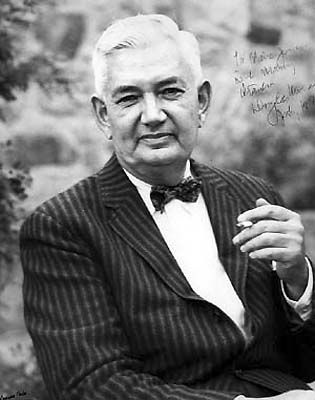
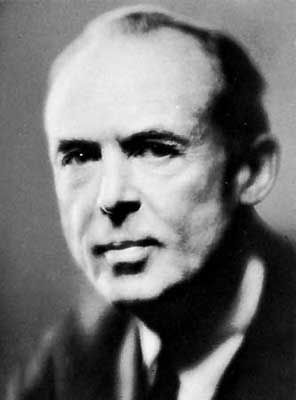
Douglas Moore, John Alden Carpenter
Source: Mercury "Living Presence" CD (my rip!)
Format: mp3, 320k/s (CBR), ADD Stereo
File Size: 153 MB
Download Link (re-up) – https://mega.co.nz/#!QBpABZQL!XaSyzHePntnk8S3MJrJ8V2vIBVUhsJJV2utISTu ZeQM
Enjoy! Don’t share! Buy the original! 🙂
———- Post added at 09:42 PM ———- Previous post was at 09:21 PM ———-
@Wimpel69, Running the risk of sounding repetitive: Thank you for continuing the musical cornucopia . I was under the impression I already had heard all of Herrmann’s recordings but the Raff Symphony is another one of your welcome additions to my musical education.
I was however already familiar with the Hanson /Mercury album . Given that you mention Disney’s attempt to include "Adventures in a Perambulator " in Fantasia (or rather what was planned as the follow up to the first movie) you might be interested to see the surviving story boards : Michael Sporn Animation – Splog ??? Perambulator (http://www.michaelspornanimation.com/splog/?p=1294)
Julius Harrison, like Montague Phillips, is another English composer whose roots like in
the 19th rather than the 20th century, and whose works are often seen as British Light Music
in view of the late romantic style that the composers employed.
This album features two of Harrison’s orchestral suites (always a popular form for
light music), the Worcestershire Suite and the Troubadour Suite. The Prelude-Music
for Harp and Strings is another charming, yet not insubstantial addition.
Hubert Clifford has enjoyed more exposure in recent years due to several high-profile
recordings on the Chandos label. Here, we can hear the lighter, more lyrical side of
his oeuvre, represented by the Serenade for Strings.
Music Composed by Julius Harrison
Played by the BBC Concert Orchestra
With Matthew Trusler (violin)
Conducted by Barry Wordsworth
"It’s a tricky thing about twentieth century English orchestral music — how exactly do you tell the difference
between "light" music composers and "serious" music composers? If you didn’t know that Julius Harrison’s richly
nostalgic Worcestershire Suite wasn’t by Delius and his lushly bucolic Bredon Hill wasn’t by Vaughan Williams,
would you know they were written by a light and not a serious music composer? Could you tell by their sprightly
tunes, striking orchestrations, warm colors, and honest earnestness that Harrison wasn’t considered to be in
the same league as Finzi or Moeran? Probably not — no more than you tell that the lovely and gracious Serenade
for Strings by Hubert Clifford that fills out the disc wasn’t in the same league as Vaughan Williams’ burley and
bumptious Partita for double string orchestra. In these world-premiere or CD-premiere recordings by Barry
Wordsworth leading the BBC Concert Orchestra, the scores of Harrison and Clifford come alive in deeply skillful
and profoundly affectionate performances. Wordsworth, the BBC Concert Orchestra’s principal conductor,
seems to have no idea that this is light music; his interpretations here grant the composers the same aesthetic
due as his interpretations of Delius, Vaughan Williams, and even Wagner did for those composers in his earlier
recordings. And the BBC Concert Orchestra, which was in fact Clifford’s orchestra for a time in the ’50s, gives
performances here that are fully in the same class as the BBC’s serious orchestras. Light or serious, anyone
who loves English music from the first half of the twentieth century will surely enjoy this disc. Dutton’s sound
in this 2006 digital recording is warm, full, and round."
All Music
Source: Dutton Epoch CD (my rip!)
Format: mp3, 320k/s (CBR), DDD Stereo
File Size: 158 MB
Download Link (re-up) – https://mega.co.nz/#!qwolwSDB!YGkXP2p7Q1VWbC7U-DpxUhtwoYYRNTzJfUFt96lzgqU
Enjoy! Don’t share! Buy the original! 🙂
———- Post added at 06:38 AM ———- Previous post was at 06:26 AM ———-
vaughan williams me aburre en sus sinfonias (salvo en su sinf.3 "pastoral" que el bella e imita todo el tiempo al gran Delius).Es bomb???stico sin nada que decir y no tiene el minimo nivel para juzgar nada menos que a Mahler-.V.W.esta bueno para lo pastoral como In the fen cuontry,the lark ascending,norfolk rhapsody,etc.
Thanks for the link!
———- Post added at 11:45 AM ———- Previous post was at 10:58 AM ———-
No.215
David Stock was born in 1939 in Pittsburgh, where he continues to make
his principal home. He studied trumpet and composition with Nikolai Lopatnikoff
and Alexei Haieff at the Carnegie Institute of Technology (later Carnegie Mellon University),
where he received his bachelor of fine arts degree in 1962 and his master of fine arts degree
a year later. He earned another master’s degree at Brandeis University, studying with
Arthur Berger. He has also studied at the ???cole Normale de Musique in Paris and at the
Berkshire Music Center.
Stock’s dramatic cantata for mezzo-soprano and chamber orchestra, A Little Miracle, has
been described by its librettist, Bess Weldon, as an “operatic monodrama.” The story is her
own creation, but it plays out against the very real and familiar theme of parent and child
hiding and attempting to escape during the German war of annihilation against Europe’s
Jews. Here, the tale is woven around the dual miracle of birth itself and of survival through
the faith and courage sustained by the memory of a mother’s song.
The title of Yizkor (lit., May He [God] Remember), Stock’s single-movement elegy
for string orchestra, refers to the name of the formal Jewish memorial service for specific
relatives (hazkarat n’shamot—remembrance of souls). This service is conducted communally,
but recited individually, among Ashkenazi Jews on four occasions on the liturgical
calendar—usually within the morning Torah service, before returning the scrolls to the ark.
Stock’s Tekiah [t’ki’a], is a three-movement work for trumpet and chamber orchestra.
The word tekiah translates from the Hebrew literally as “sounding,” but it is most commonly
associated with the sounding, or blowing, of the shofar and its required hearing on
Rosh Hashana (notwithstanding the various functions of the shofar on other occasions, both
historically and in contemporary usage). More specifically, t’ki’a is the name of one of the
three plaintive call patterns—mostly outlining the interval of a perfect fifth—according to
which the shofar is blown on Rosh Hashana and at the conclusion of Yom Kippur.
Y’rusha (Hebrew for “inheritance” or “heritage”) is a cleverly fashioned divertissement of unrelated
melodic and modal references, tune shards, and instrumental idioms derived mostly
from the perceived melos of eastern European Jewry and its immigrant generation in America.
Stock has imagined these as a single collective representation of one particular aspect of
Jewish musical y’rusha. The work, for clarinet solo and an ensemble of seven instruments, is
permeated by sighs, wails, slides, exaggerated portamento effects, and other clich???s emblematic
of the performance styles and techniques of 19thand early-20th-century Jewish wedding-band
musicians known as klezmorim (sing., klezmer).
Music Composed by David Stock
Played by the Rundfunk-Sinfonieorchester Berlin & Pittsburgh New Music Ensemble
With Elizabeth Shammash (mezzo-soprano), Stephen Burns (trumpet) & Richard Stoltzman (clarinet)
Conducted by Gerard Schwarz & David Stock
"The Pittsburgh composer David Stock (b 1939) is the subject of this installment of the Milken Archive of
American Jewish Music. In a departure of sorts from the Archive’s usual formula, the program contains no
liturgical music, unless you count the insertion of the Ashkenazi tunes for Avinu Malkenu and Oseh Shalom into
Y’rusha, a clarinet concerto. The last three pieces are purely orchestral, and the first, A Little Miracle, is a
solo cantata for mezzo and orchestra. (In keeping with the Milken formula, the cantata is on Holocaust themes.)
Stock’s preternaturally youthful music is simple and accessible without pandering too much to its audience;
this is the sort of music I’d feel good about giving to my less musically sophisticated relatives, who would
get all the musical references and maybe even be able to talk about the clear, neoclassical structures. As a
composer, Stock has the clarity (but not the austerity) of a latter-day minimalist like Part and Adams together,
and the heart of a Joe Sixpackstein; there’s no fancy stuff, no hamhanded sophistication and pretentions, to
get in the way of the music’s simple expression."
American Record Guide
Source: Naxos "Milken Archive" CD (my rip!)
Format: mp3, 320k/s (CBR), DDD Stereo
File SIze: 162 MB (incl. booklet)
Download Link (re-up) – https://mega.co.nz/#!lMhwVQ6a!RvbNfEtVN1_kH3TxA9GtdjK3th14j_w-p7rRuHxD4B4
Enjoy! Don’t share! Buy the original! 🙂
Canadian composer Godfrey Ridout was born in Toronto May 6, 1918 and died on November 24, 1984.
His interest in music was kindled early by being taken to concerts of the newly reformed Toronto Symphony
Orchestra. He received his musical education in Toronto under Ettore Mazzoleni, Charles Peaker and
Healey Willan. He was appointed to the staff of the Toronto Conservatory of Music (now the Royal
Conservatory) in 1939 and to the Faculty of Music, University of Toronto, in 1948 where he was an
Associate Professor. He retired from the University’s Faculty of Music in 1982.
Ridout’s approach to music was shaped by his instructors at Upper Canada College: Ettore Mazzoleni,
Healey Willan, Charles Peaker, and Weldon Kilburn. He loved the music of English composers of the 19th and
early 20th centuries. With Edward Elgar as his favourite, he also admired Vaughan Williams, Frederick Delius,
Sir Arthur Sullivan, and Benjamin Britten. He also liked the works of Richard Wagner, Richard Strauss, Ludwig van
Beethoven, and Johannes Brahms. He favoured music based on craftsmanship and was not a fan of music
that was overly showy.
Ridout’s career as a composer was an active one: his many compositions include Two Etudes for String Orchestra (1946),
Cantiones Mysticae (music set to Holy Sonnets by John Donne) (1953), Music for a Young Prince
(written to celebrate a 1959 visit to Canada by Prince Charles) and Fall Fair (1961), his best-known piece. In 1981,
he was involved in a full staging of the Canadian opera Colas and Colinette. For this project, he reconstructed a
full score and composed an overture.
Music Composed by Godfrey Rdiout
Played by the Toronto Symphony Orchestra
With Joanne Kolomyjec (soprano) & Steve Dann (viola)
Conducted by Victor Feldbrill
"Godfrey Ridout was proud of his heritage as a Canadian. He was a fourth generation Torontonian, a descendant
of Thomas Ridout, the first Surveyor-General of Upper Canada in the Simcoe administration of the 1790s. He was also
enormously proud of his great-great grandmother on his mother’s side, Amoi Chun Bird, who had immigrated to Barrie,
Ontario from China in 1869, raising eight children largely by herself after the death of her husband four years later.
Amoi lived until 1923, long enough to leave memories in a small boy’s mind of a revered elderly woman who loved
cars, and ruled her large family as a traditional Chinese matriarch would have done.
Godfrey Ridout grew up in Toronto, and was educated entirely in Ontario. His early education was at Lakefield
College School, where regular participation in the local fall fairs provided later inspiration for his best known work.
Most of his secondary schooling occurred at Upper Canada College which had a very good music program, but his
final year of high school was spent at North Toronto Collegiate, to which he had switched in pursuit of the
opportunity to conduct student productions of Gilbert and Sullivan.
Godfrey’s father wanted him to go into banking or insurance, good jobs in the late 1930s, and traditional careers
in his family. Following an unsuccessful job interview with a bank manager who was looking for recruits who could
add strength to the branch hockey team, his family appears to have dropped its insistence on a business career,
leaving Godfrey to pursue musical studies at the Toronto Conservatory of Music (now the Royal Conservatory of
Music) and privately with teachers such as Ettore Mazzoleni and Healey Willan. You can learn more about Godfrey’s
musical education and his career from the article in the Canadian Encyclopedia.
At the Toronto Conservatory, Godfrey met the beautiful young soprano and pianist Freda Antrobus (1920-2005).
The daughter of English immigrants, Freda was born and raised in Coleman, Alberta, a coal mining town in the Crows
Nest Pass. The small towns and cities of depression era Alberta spawned a vibrant musical life that revolved around
lessons and competitive festivals, and examinations with examiners imported from the Toronto Conservatory. Freda
was headed for the Royal College of Music in London when war intervened, leading her to study in Toronto instead,
where she became a double gold medalist in voice and piano at the Conservatory. She was a cast member of a
popular radio show in Toronto singing as "Freda Clare", and later became a founding member of The Festival Singers
of Canada. She retired professionally after the birth of her third child, returning to part-time television work as an
actor after her husband’s death.
Godfrey and Freda were married in 1944 at the Church of St. Mary Magdalene in Toronto. This high-Anglican
(Anglo-Catholic) church was home to Godfrey’s teacher Healey Willan, and had special meaning for Godfrey. The
mysticism of the traditional Anglican mass, the language of the Book of Common Prayer, the Sanctus bells and the
incense were outward characteristics of a spirituality that shows itself clearly in much of his work, particularly the
Cantiones Mysticae. Although Godfrey was a Churchwarden at St. James Cathedral for many years, his funeral
service was held at St. Mary’s.
The Ridouts had three children, Naomi (1948), Victoria (1951) and Michael (1957-1998). Family life was paramount
for both parents. Although Godfrey’s professional life, which involved composing and teaching at the Faculty of
Music, University of Toronto, conducting and teaching private composition students, took up much of his day,
there was always time for activities involving all the children. As small children, bedtime was signaled by a
thumping rendition of Elgar’s "Land of Hope and Glory" from Godfrey at the grand piano. Daily dinnertime was a
ritual event, with much conversation and at times heated discussions on just about anything. Sunday dinners
were a rather formal affair, usually with guests. Some were musicians passing though on tour with their wives,
such as Sir Isadore Godfrey and James Walker, conductors of the D’oyley Carte Opera Company. Frequent guests
included Kathleen Parlow, an elderly and formidable violinist, George "Papa" Lambert, Freda’s voice teacher and
Naomi’s godfather, and his wife Gretchen, Herman Voaden, teacher and playwright, and his wife Violet, and
Harvey Olnick, a transplanted New Yorker and musicologist who was Godfrey’s closest friend.
The children have fond memories of growing up in a family where they were included in their parents’ musical lives.
They learned from an early age to sit silently among empty seats in Eaton Auditorium, Massey Hall or in cramped
CBC Television studios during rehearsals for productions such as Edward German’s Tom Jones, or Gilbert and
Sullivan’s The Mikado. On rehearsal nights of the Festival Singers, Godfrey cooked wonderful omelettes for the
children while Freda was gone. They were also taken from an early age to "adult" concerts, ballets and plays,
on regular outings to Toronto Island, and for summers to England, to a cottage in Muskoka, or to Vancouver
(where Godfrey taught summer school at the University of British Columbia). This fairly tranquil routine was disrupted
in the early 1960s when son Michael developed a serious childhood cancer from which he nearly died. The intense
sadness and stress of that period is reflected in Godfrey’s work The Ascension (1961-2), which sets text by Bishop
Venantius Fortunatus (503-609) including the line "Rescue, recall in life those who are rushing to death". Godfrey
later said that this particular line provided huge comfort and the resources necessary to complete the work.
Godfrey had joined the staff of the Conservatory in 1940, moving to the music department of the University of
Toronto in 1948. Despite his lack of advanced degrees, he was true scholar of music history, teaching courses
ranging from introductory surveys for non-musicians to specialized music history. In his early career, he earned extra
money from directing the Eaton Operatic Society and the St. Joseph’s College School choir. He was also musical
director and conductor for a number of successful CBC television productions of Gilbert and Sullivan operettas
produced by Norman Campbell. In later years, he used both his scholarly knowledge and his teaching skills to write
the popular program notes for the Toronto Symphony Orchestra. These were published after his death as A Concert
Goer’s Companion to Music.
When he wasn’t teaching, Godfrey was often at work in his home "studio", composing. The studio was off limits to
the children while he was work, sometimes for hours at a stretch. The family could hear phrases of now familiar
works such as Fall Fair being hammered out and revised on the upright piano."
Source: CMC CD (my rip!)
Format: mp3, 320k/s (CBR), DDD Stereo
File Size: 173 MB (incl. covers, booklet)
Download Link (re-up) – https://mega.co.nz/#!cFRRkbAS!FFNnnGcuSVZnR8GMc9gR2iK_8yFCxX-1FGtROiAl7M8
Enjoy! Don’t share! Buy the original! 🙂
A characterful and expressive dramatic cantata by one of the leading French film composers,
Fr???d???ric Talgorn (Robotjox, The Fortress, Delta Force II): Vinum et Sanguinem,
or: Hymne ??? Saint Vincent.
Music Composed by Fr???d???ric Talgorn
Played by the Camerata de Bourgogne
With the Choeur de la Saint Vincent
Conducted by Michel Piquemal
"Fr???d???ric Talgorn (born July 2, 1961 in Toulouse, France) is a French composer for film and television.
He studied music at the Paris Conservatoire where his teachers included Sabine Lacoraet and Yvonne Loriod,
but he completed his studies on his own. In 1987 he moved to the United States where he began to compose
film music. He also wrote the official music to accompany the Olympic flame for the 1992 Winter Olympic Games.
Notable film scores include Robot Jox, Delta Force 2: The Colombian Connection, Heavy Metal 2000, and Fortress.
He also has an extensive catalogue of concert music, and has often conducted his own works in concert and
recording sessions. He has also conducted and recorded film scores of others with the Royal Scottish National Orchestra."
Wikipedia
Source: Disques Pierre V???rany (my rip!)
Format: mp3, 320k/s (CBR), DDD Stereo
File Size: 145 MB
Download Link (re-up) – https://mega.co.nz/#!hFQHAbAK!bR-zHUCaZZomJEzWt6IigCWQT3UxfrdtDU0ZNuTONNM
Enjoy! Don’t share! Buy the original! 🙂
Vitězslav Nov???k was born in 1870, the son of a doctor. His father died when his eldest son was twelve,
leaving him with some responsibility for the support of his mother and his younger brothers and sisters. In spite
of an earlier induced dislike of music, at the Gymnasium in the south Bohemian town of Jindrichuv Hradec (Neuhaus),
where the family settled, Nov???k overcame this, under the guidance of an inspiring teacher, to become a good
pianist and to start composing music of his own. His tendency was towards programme music, much influenced
by Mendelssohn, and later by Schumann and Grieg. He studied law at Prague University on a scholarship,
concentrating at the same time largely on musical studies at the Conservatory. He suffered harsh criticism
there from his harmony teacher, Knittl, and this was only overcome to some extent by his attendance at master
classes in composition given by Dvor???k. He graduated from the Conservatory in 1892 with his Violin Sonata and
continued piano studies for four more years, while continuing to attend courses at the University until 1895,
when he left without taking a degree.
The symphonic poem Pan, originally written for piano, is in five movements. It opens with a Prologue, an
evocation of the spirit of the ancientgod, delicately conjured up in a telling use of the orchestra, in which the
piccolo and then the flute suggest the shepherd pipes, rather as if Debussy had been born and bred in the same
country and studied with Dvor???k, never venturing to Paris. The rarefied air of the mountains is suggested in the
opening of the motivically related second movement, leading to music of greater majesty, but ending as it began.
The third movement, Sea, marked with some originality Allegro spumante, suits the music to the direction, a
romantic picture, again united to what has gone before by its thematic material. The next movement opens in the
stillness of the forest, recalling the first bars of the whole work. Pan ends in fernale caprice, impetuous in its
opening, then briefly and sweetly pleasing, moving forward to a swirling tarantelle, tantalisingly introduced by
the woodwind, but bringing moments of respite and nostalgic reminiscences of what has passed. The movement
brings to aserene and tranquil end a work of notable thematic unity, a sensuous evocation of nature.
Music composed by Vitězslav Nov???k
Played by the Slovak Philharmonic Orchestra
Conducted by Zděnek B???lek
"Although the Czech composer Vitezslav Novak (1870-1949) called "Pan" (1910) a symphonic poem it is, in fact,
in five separate, though thematically linked, movements. Beyond the use of the flute and the piccolo in the first
movement there seems to be little connection with any myths concerning the Greek god. Instead, the music
seems to be a celebration of nature, in particular, mountains, sea and forest. The final movement, however
is, somewhat incongruously, a picture of "Woman". The music does not tell a story and could just as well have
been called a suite. Novak uses a very large orchestra and the late Romantic idiom is Straussian in its opulence,
though Novak cannot match the best Strauss for melodic memorability or concentration of incident. There is
also a dash of Impressionism in "Pan" and, if you think that Janacek was a totally original composer, you will
hear, in the ostinato patterns of the great "Sinfonietta", the influence of Novak. Also, listen to those shrieking
flutes and piccolo at 4 mins 33 secs in the Prologue to Novak’s piece.
The Prologue contains the seeds of much of the music to come. The melodic material presented here is fairly
plain in itself. It is almost exclusively diatonic and tends to be rhythmically even or to alternate long and
short notes. Perhaps, in these chorale-like fragments, Novak wanted to suggest a pantheistic connection
between nature and religion.
As well as using material from the first movement, the second movement ("Mountains") introduces a new
melody (first heard on the oboe at 1 min 32 secs) and a longer chorale-like idea. A four note idea (in C major,
G,A,E,D) from the prologue is prominent and is presumably intended to suggest the majesty of the mountains.
If you know Novak’s wonderful cantata "The Storm" you will very soon recognize the same composer in the
turbulent third movement ("Sea"). The G, A, E, D motif and a swinging eight (you may hear it as seven) note
tune from the first movement are extensively used. Later the waters settle somewhat but this is definitely
the most vivid picture of the four.
The fourth movement ("Forest") begins by referring directly to the opening of the prologue and then to music
from the "Sea" movement. (Perhaps the mountains run down to the sea!) A placid tune derived from an idea
in the Prologue is sung by the strings at 3 mins 12 secs. The forest is a deep and quiet one. This slow movement
is the most melodically generous of them all. By the end, the four note motif reasserts itself and a distant
cuckoo is heard.
The final movement is "Woman". To encapsulate such a complex subject in a mere 15 minutes of music is hardly
possible, of course. Novak, however, does his best. The first half of the movement is lightly capricious in mood,
the second half more romantic. Again, material from the first movement is much in evidence. Eventually, the
lyrical tune from the "Forest" movement begins to gain prominence. The piece ends quietly."
Amazon Reviewer
Source: Marco Polo CD (my rip!)
Format: mp3, 320k/s (CBR), DDD Stereo
File Size: 118 MB (incl. cover, booklet)
Download Link (re-up) – https://mega.co.nz/#!dUpjgJBC!QiTajV5IcrhUCcEcTwgN6yISO8VB1fMrSU_Lp13 cssQ
Enjoy! Don’t share! Buy the original! 🙂
———- Post added at 11:20 AM ———- Previous post was at 10:30 AM ———-
No.219
The Airborne Symphony (also known as Symphony: The Airborne) is a work by American composer Marc Blitzstein
for narrator, vocal soloists, male chorus, and large orchestra. The symphony uses music that the United States Army Air Forces,
in which Blitzstein served during the World War II, originally commissioned for use in film.
Blitzstein began the war as a member of the U.S. Eighth Army Air Force’s film division in London, England, working as a composer,
scriptwriter, and translator. He was chosen to score a film on the history of aviation through his promotion to corporal in January
1943. Blitzstein also began work on the orchestral poem Freedom Morning that summer for eventual performance in Royal Albert Hall.
Work on the Airborne score continued into 1944, with Blitzstein providing other services to the U.S. Army. By mid-1944, he had
been promoted to sergeant and became music director of the American Broadcasting Service. The original film project did not
come to fruition and Blitzstein, who composed his score for a large orchestra and male chorus, did not have the needed manpower
for a wartime concert.
Blitzstein returned to the United States in May 1945. His score of The Airborne had been lost en route from England, but he was
able to play sections of the work on piano for conductor Leonard Bernstein. Bernstein enthusiastically arranged its premiere for
April 1946 and Blitzstein rewrote the score from memory. The original score was recovered, but Blitzstein preferred the newer version.
The symphony was first performed by the New York City Symphony Orchestra under Bernstein on April 1, 1946. Renowned
filmmaker Orson Welles served as narrator; Charles Holland was tenor soloist and Walter Scheff was baritone soloist with men
from the Robert Shaw Collegiate Chorale. The recording featured here a is a later one, but with the same
narrator and conductor.
Also included are the lovely suite from the ballet The Incredible Flutist by Walter Piston (which we already
encountered here in an earlier upload), plus a rather bland Prelude for Orchestra by Edward Hill, a n early
teacher of Bernstein’s.
Music Composed by Marc Blitzstein, Walter Piston & Edward Hill
Played by the New York Philharmonic & Columbia Symphony Orchestras
With Orson Welles (narrator), Andrea Velis (tenor), David Watson (baritone)
And the Choral Art Society
Conducted by Leonard Bernstein
"Marc Blitzstein’s Airborne Symphony is a fascinating bit of wartime Americana, and Bernstein, who
was a "little brother" to the older composer, recorded it twice. RCA Victor reissued his first recording of it
several years ago, and I am glad that Sony finally has reissued this one. While not necessarily better, it is
in stereo, and it features the sonorous voice of Orson Welles.
Blitzstein wrote the work for the United States Air Force. (Sony’s annotations claim it was an Army commission.
Nevertheless, in 1943, when work on the Airborne Symphony began, Blitzstein was an officer in the Air Force,
and was stationed in London.) The composer frequently had to take shelter against air raids as he wrote
the symphony, which addresses both the positive and (most tellingly) negative aspects of mankind’s ability
to fly through the air. He suddenly was called back to America, and he mistakenly left the incomplete score
behind. It was returned to him only after a long delay. In the meantime, Blitzstein (with Bernstein’s
encouragement) reconstructed the symphony from memory and hand-written notes. When the original score
arrived, Blitzstein found himself to be more satisfied with the reconstructed version. He completed the
symphony, and it was premi???red in 1946, with Bernstein on the podium and Welles as the narrator (or
"The Monitor"). By then, the war was over, but fear was not. The first recording, made later that year,
substituted famed choral conductor Robert Shaw for Welles. Both have beautiful speaking voices, and both
treat Blitzstein’s text histrionically. If anything, Welles is more restrained in this 1966 recording, which
also features excellent choral work. The important thing, though, is to give this work a try. Na???vely
swaggering, thoughtful and populist, it has the power to be a crowd-pleaser. I wonder why there hasn’t
been more interest in it. Sony does not include texts (it did in the original LP release), but everyone’s diction
is clear enough to keep this from being problematic. How many classical works do you know that include
the words "Snafu" and "Fubar"?
Bernstein studied harmony and counterpoint with Walter Piston at Harvard. The Incredible Flutist –
the suite is recorded here – is a ballet score that premi???red in 1938. The story that it tells is about
an itinerant flutist, a sort of Pied Piper, whose playing charms both women and snakes. It’s not an
ambitious score and is less serious than Piston’s symphonies and concertos. This recording was made
in 1963. Bernstein conducts his teacher’s work with an appreciation for its dry humor; he resists the
temptation to exaggerate its effect.
Edward Burlingame Hill, born in 1872, was from an earlier generation than Piston. He taught the young
Bernstein orchestration, also at Harvard. The Pr???lude for Orchestra was written when he was in his 80s.
(He died in 1960, many years after Bernstein had become a star conductor/composer.) This 8-minute work
is a fairly unusual example – particularly at this late date – of American impressionism. Bernstein said
that Hill "was not a first rate genius, but a master of orchestration, a salty New Englander who loved
Debussy," an opinion supported by this Pr???lude. Bernstein recorded it (in mono) in 1953 with the
Columbia Symphony Orchestra.
This disc is another entry in Sony’s "Bernstein Century" series. It seems that there is little that
Bernstein recorded for Columbia and CBS (for any other label, for that matter) which is not on CD.
That’s something for them to be proud of."
Classical Music Net
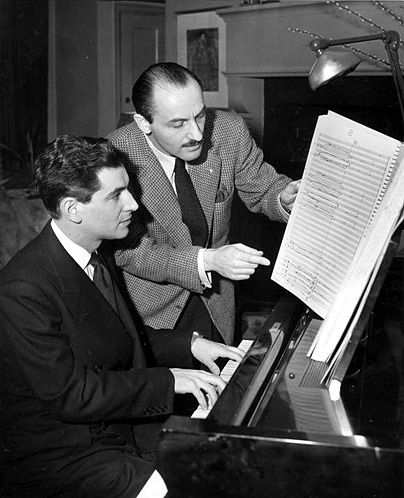
Blitzstein and Bernstein, studying the score to "The Airborne"
Source: Sony CD (originally on CBS) (my rip!)
Format: mp3, 320k/s (CBR), ADD Mono/Stereo
File Size: 168 MB (incl. covers, booklet)
Download Link (re-up) – https://mega.co.nz/#!tEp23DTJ!C0weHVnIRLkfnJ50gnPeqDZnlY9H1TCJKNjG6o_ sdnw
Enjoy! Don’t share! Buy the original! 🙂
A diverse and colorful collection of miscellaneous orchestral works, some programmatic, some abstract,
by the moderately advanced Welsh composer William Mathias (1934-1992). A student of
Lennox Berkeley, Mathias had a very successful career as a classical composer in Britain, with many
commissions coming his way. His style could be broadly characterized as "neo-classical", but he
embraced neo romantic and even some avantgarde techniques as well. The opening Dance Overture,
e.g., might just as well have been composed by Malcom Arnold, while works like Vistas and Laudi
are more progressive. A lot of his music sounds very "cinematic", too.
Music Composed by William Mathias
Played by the London Symphony, New Philharmonia, English Chamber &
Welsh National Youth Symphony Orchestras
Conducted by David Atherton
"William Mathias’s love of life is the first thing that strikes the listener. This collection of shorter works from a variety
of sources (see title) reveals many facets of this composer’s imagination – indeed, this could serve as the ideal
introduction to Mathias’ music.
The exuberant Dance Overture evokes the Celtic spirit of the dance, with the LSO enjoying each and every accent.
It makes the ideal opener for the disc. The Divertimento, Op. 7 of three years previous is the student work that led
to a publishing contract with Oxford University Press. Of its three movements, it is the central Lento non troppo that
is the most memorable. It is the English Chamber Orchestra, here, that sets up a haunting, hypnotic atmosphere
(interestingly, in the Prelude, Aria and Finale for String Orchestra it is the ‘Aria’ that is the most affecting movement).
The unsettled undercurrent to the music of this Lento seems to introduce a new, deeper element, only to be banished
by the Bart???kian spiciness of the finale.
Concurrent with the Dance Overture, the Invocation and Dance, Op. 17 is made up of the purest joy. The very opening
is almost Coplandish (it sounds like the slower parts of Rodeo to me – this passage is what the composer described as
‘a broad-spanned summons to attention’) and indeed most of the Invocation is terrifically delicate (listen out for a
beautifully-realised oboe solo). The Dance is positively bursting with energy – once again, the LSO’s virtuoso side
is to the fore.
The Sinfonietta was written for a youth orchestra (the Leicestershire Schools Symphony Orchestra), so it is entirely
fitting that it is the 1975 National Youth Orchestra of Wales that is featured on the present recording. The influence
of jazz and blues can be heard, especially in the second and third movements. Mathias’s music is so obviously suited
to performance by young people that this emerges as one of the highlights of the disc. The recording is up-front
and exciting.
Mathias wrote a sequence of single-movement orchestral works that he described as ‘landscapes of the mind’.
The last two offerings are instances of these ‘imaginary landscapes’ (Helios of 1977 and Requiescat of 1978 are
further examples). Laudi, in accordance with its title, concentrates on prayer and praise. The scoring is masterly
– a Stravinskian influence is present that adds a most attractive (to this listener) edge to the music. Finally,
Vistas of 1975. Inspired by a visit to America, the music speaks evocatively of large open expanses."
Music Web
Source: Lyrita CD (my rip!)
Format: mp3, 320k/s (CBR), ADD Stereo
File Size: 166 MB
Download Link (re-up) – https://mega.co.nz/#!oJ4UiC7Y!F3dnETWX96AF9Dqz-5LmVAGy2ZAIafBLSaou2bh9dts
Enjoy! Don’t share! Buy the original! 🙂
An obscure composer even among the more obscure of the 20th century, Spanish Mar???a Teresa Prieto fled her homeland
in 1936 to escape the dangers of the civil war, never to return except for a brief trip when she accepted a prize for her 1958
Modal Quartet. Abroad, her music was conducted by the likes of Erich Kleiber and Carlos Ch???vez, but in Spain she remained
a virtual unknown. Her basically conservative oeuvre embraces folkloristic elements, stylistically it’s broadly neo-classical,
with some impressionistic touches. This 2-CD album features her complete orchestral works, including both abstract
(Sinfon???a breve, Sinfon???a de la danza prima, Tema Variada y Fuga) and programmatic works
(Sinfon???a Asturiana, Impr???sion Sinf???nica, Chichen Itz???, El Pablo Verde, Cuadros de la Naturaleza).
Music Composed by Mar???a Teresa Prieto
Played by the Orquesta de C???rdoba
Conducted by Jos??? Luis Temes
"Aunque casi completamente desconocida para el p???blico espa???ol (e incluso para el de Asturias, su tierra natal),
la figura de Mar???a Teresa Prieto nos aparece hoy como verdaderamente notable dentro la creaci???n musica
al espa???ola de la segunda mitad del siglo XX, y desde luego, como el de una de las dos o tres figuras mayores
de la historia de la m???sica asturiana. Toda su obra, y muy especialmente su producci???n sinf???nica, rezuma
la a???oranza de su Asturias perdida, lejana, recordada y amada desde su exilio en M???xico, pa???s que la acogi???
desde los primeros d???as de la guerra civil espa???ola.
Nacida en Oviedo en 1896, en el seno de una familia de la clase media asturiana de entonces —altamente
entusiasta de la m???sica, la poes???a y las artes—, estudi??? Mar???a Teresa Prieto con el pianista y compositor asturiano
Saturnino del Fresno, quien sobre todo le inculcar???a la pasi???n que nuestra compositora mantendr???a durante
toda su vida: el magisterio de Johann Sebastian Bach, norte de casi toda su producci???n creadora. Qued???
hu???rfana de padre desde muy temprana edad, lo que acentuar???a el constante tinte de tristeza y nostalgia
que marcar???a toda su vida. Trasladada a Madrid, ser???a Benito de la Parra —su profesor en el Conservatorio
de Madrid— quien le introducir???a en un para ella nuevo mundo arm???nico: el sistema modal, tan presente
en buena parte de su obra.
Cuando apenas hab???a compuesto a???n sus primeras obras de c???mara, de corte a???n l???gicamente escol???stico,
el estallido de la guerra civil la colocar??? en una situaci???n personal muy peligrosa ante las virulentas revueltas
en Asturias. Su hermano Carlos, que se encontraba en M???xico —y que disfrutaba all??? de una cierta prosperidad
empresarial—, le aconseja embarque de inmediato hacia aquel pa???s. All??? llegar??? nuestra compositora el 1 de
diciembre de 1936 y all??? esperar??? la clarificaci???n de la situaci???n b???lica en Espa???a. Y all??? tambi???n se encontrar???,
acogida con la generosidad que el gobierno del presidente C???rdenas dispens??? a todos los exiliados espa???oles,
con otros exiliados del lado republicano, unidos por la tragedia com???n de la guerra. No puede afirmarse,
hablando con propiedad, que Mar???a Teresa Prieto fuera una exiliada pol???tica; m???s exactamente cabr???a calificarla
como transterrada (por seguir el t???rmino empleado por el fil???sofo Jos??? Gaos) y desplazada a causa de
la guerra entre los espa???oles.
Mar???a Teresa se establece en el caser???n de la familia Prieto en San ???ngel. Ese caser???n ser??? con el tiempo
punto obligado de reuni???n intelectual y musical, y en su perchero colgar???n su sombrero desde Stravinsky
hasta Erik Kleiber y desde Carlos Ch???vez hasta Darius Milhaud. Y por supuesto, todos los colegas de
transterramiento espa???ol en M???xico: entre ellos, Adolfo Salazar, que vivi??? en la casa durante los ???ltimos
a???os de su vida y que incluso falleci??? entre sus muros.
Pocos meses despu???s de su llegada pasa Mar???a Teresa a estudiar composici???n con el maestro Manuel Ponce,
quien confirma su enorme talento para la composici???n. Desde dos a???os despu???s, ser??? Carlos Ch???vez, otro
hito en la composici???n latinoamericana de la ???poca, su nuevo maestro; ???l, adem???s, dirigir??? el estreno de la
mayor parte de sus obras orquestales.
Su tercer maestro trasatl???ntico ser??? el citado Darius Milhaud, pero no estudiar??? composici???n con ???l en el propio
M???xico, sino en California, a cuyo Mills College, en Oakland, viajar??? Mar???a Teresa durante dos cursos: 1946
y 1947. A partir de entonces, no hay grandes novedades en su vida: su amor por la soledad, sus horas y
horas en el torre???n de la casa familiar (adonde se le izaba incluso
la comida por un peque???o dispositivo ascensor, de manera que no sal???a de su cuarto de estudio ni siquiera
para comer), y su nunca asumida lejan???a de Asturias.
Mar???a Teresa Prieto no volver??? ya a Espa???a —salvo alg???n viaje rel???mpago, uno de ellos para recoger el premio
Samuel Ross, que le fue concedido a su Cuarteto modal (1958)—, pues aunque invitada varias veces por el
r???gimen imperante en Espa???a despu???s de 1939, su talante estaba muy distante del de los vencedores.
Y el advenimiento de la democracia en 1975 correspondi??? ya con una edad muy avanzada de la compositora,
que fallecer???a en 1982, a la edad de 86 a???os.
En ese caser???n familiar viv???a tambi???n un joven m???sico, hijo del hermano de la compositora, que inici??? desde
temprana edad una prometedora carrera como violoncellista, y que gozaba de la ternura y simpat???a de ella:
era su sobrino Carlos Prieto, con el tiempo anfitri???n de los visitantes ilustres de la casa, hasta tal punto que
llegar???a a acompa???ar a Stravinsky en su regreso a Rusia, tras sus a???os de destierro. Muchos a???os despu???s,
nuestra protagonista dejar???a precisamente a su esposa Isabel la custodia legal de su legado compositivo,
que de su mano ha llegado as??? hasta nosotros.
Pese a que Mar???a Teresa Prieto fue ajena a todo tipo de ???xito social, y refractaria al ???xito mundano de su m???sica,
no es menos cierto el que hubo varios ilustres m???sicos que lograron romper su habitual modestia y llevar su
m???sica a muy ilustres atriles: as???, el gran Erik Kleiber (valedor, record???moslo, de Alban Berg o de Anton Webern)
dirigi??? el estreno de una de sus sinfon???as; Carlos Ch???vez, el del antes citado Adagio y fuga; Ata???lfo Argenta dirigi???
el estreno en Espa???a de su Sinfon???a breve y de Chichen-Itz???; etc…
(….) esta extraordinaria compositora, cuya producci???n entera, nost???lgica siempre de la Espa???a lejana y perdida,
est??? presidida por la extrema sencillez y elegancia, ajena a todo abigarramiento. Hay incluso en su m???sica un
puntito de ingenuidad de una infancia nunca abandonada. Y sobre todo, por su pasi???n por la nobleza del
contrapunto y la fuga de Johann Sebastian Bach, a quien, como dijimos arriba, reconoc???a como su gran maestro."
Jos??? Luis Temes
Source: Verso CDs (my rip!)
Format: mp3, 320k/s (CBR), DDD Stereo
File Size: 276 MB
Download Link (re-up) – https://mega.co.nz/#!JEBHHa7A!f3v-fgHCIoZk8nXoSQqkeUpIRVYc6TgvI64kfkaOcI4
Enjoy! Don’t share! Buy the original! 🙂
Two ballet scores from the Ukraine. Reinhold Gliere, best remembered for his epic program symphony
"Ilya Murometz" (uploaded here earlier) wrote Taras Bulba when he was 76. His style hadn’t changed much
since the early days of the symphony – his role models were still Tchaikovsky, Glazunov and the music of
the "Mighty Handful". Be that as it may, the ballet is very colorful and offers many incidental melodic
pleasures. Another Ukraine–born composer, Yevhen Stankovych, 67 years Gliere’s junior, was a
student of Boris Lyatoshynsky, who, in turn, had studied with Gliere. The real-life Rasputin, obviously,
makes an excellent subject for musical drama, and Stankovych exploits the violence and grotesqueness
of his life’s story in a chilling and vividly satirical score.
Music Composed by Reinhold Gliere & Yevhen Stankovych
Played by the Odessa Philharmonic Orchestra
Conducted by Hobart Earle
"ASV’s list of recordings has shown pioneering spirit and risk-taking from its earliest years.
Its Soviet and Slav catalogue breaks much new ground and does so with flair using local
orchestras and conductors.
Gliere’s Bulba ballet suite, running some 34 minutes, is old-fashioned for 1952. Borodin, Tchaikovsky
and Glazunov all serve as models. The music is never less than pleasing. Taras Awaits his Sons is
specially affecting as also is the heat-hazed sway of the baking steppe in The Boundless Ukrainian Steppe.
Gopak has that whirligig quality we know so well – how easy to visualise the Bolshoi dancers. The suite
ends in a wildly abandoned dance for the Zaporozhi.
This was the last of Gliere’s ballets. The earlier, more famous counterparts were The Bronze Horseman
and The Sheep’s Spring. Taras was never performed.
The Stankovych ballet suite is in four movements. The grand adagio is of awesome amplitude and breeds
an heroic horn theme. The absurdist Galop takes us back to Satie’s machine age 1920s – raucous and
rambunctious in line with Parade and Love of Three Oranges. The Solo for Orchestra suggests a great
lake with strings of a radiant luminosity paralleling Valentin Silvestrov’s fifth symphony. Altogether a
most striking series of pictures and a more approachable introduction to Stankovich than the Marco Polo
set of symphonies.
A safely recommendable collection, if short on time, Recorded with resonance and impact."
Music Web
Source: ASV CD (my rip!)
Format: mp3, 320k/s (CBR), DDD Stereo
File Size: 130 MB (incl. covers, booklet)
Download Link (re-up) – https://mega.co.nz/#!JEBDlLrb!VjG64Rk8rWonDMGpLoWP1CQYMHNiyB_qBnZd4VC AVdc
Enjoy! Don’t share! Buy the original! 🙂
Tobias Picker (b. New York City, 1954), called ???our finest composer for the lyric stage??? by The Wall Street Journal,
is a composer of numerous works in every genre drawing performances by the world???s leading musicians, orchestras and
opera houses. Picker began composing at the age of eight and studied at the Manhattan School of Music, The Juilliard School
and Princeton University where his principal teachers were Charles Wuorinen, Elliott Carter and Milton Babbitt. His first
commissions occurred while still in his late teens and he quickly became established as one of America’s most sought
after composers.
By the age of thirty, Picker was the recipient of numerous awards and honors including the Bearns Prize (Columbia University),
a Charles Ives Scholarship, and a Guggenheim Foundation Fellowship. In 1992, he received the prestigious Award in Music
from the American Academy of Arts and Letters. From 1985-90, Picker was the first Composer-in-Residence of the
Houston Symphony. He has also served as Composer-in-Residence for such major international festivals as the
Santa Fe Chamber Music Festival and the Pacific Music Festival.
The Encantadas was commissioned by the Albany Academy in celebration of their 175th anniversary, and premiered by the
Albany Symphony Orchestra with Michael Arkin as Narrator, conducted by Julius Hegyi, on October 14 and 15, 1983, at the Troy
Savings Bank Music Hall and the Albany Palace Theatre. It has been recorded with English, German and Japanese narration
(by Sir John Gielgud (the version recorded here), Will Quadfleg, and Mariko Miyagi, respectively), performed in English,
The text was drawn from Herman Melville’s vivid and poetic descriptions of the Galapagos Islands, originally written for
Collier’s Magazine. Melville visited the Galapagos in 1841, as part of a whaling voyage he undertook to gather background material
for Moby Dick. Struck by the islands’ fierce beauty and strange inhabitants, Melville wrote a series of literary sketches which were
ultimately published in Collier’s. Herman Melville is the Albany Academy’s most famous graduate. By setting Melville’s prose as narrative
with music, Picker resuscitated the nineteenth-century genre of melodrama. Contrary to its sensational and dramatic connotation in
today’s world, melodrama was a legitimate artistic venture in the nineteenth century. It mingled the spoken word, and sometimes
song, with independent music.
The album also contains the short, smooth tone poem Old and Lost Rivers, as well as Picker’s reflection on a work
by 19th century German composer Robert Schumann, Romances and Interludes.
Music Composed by Tobias Picker
Played by The Houston Symphony
With Sir John Gielgud (narrator)
Conducted by Christoph Eschenbach
"Picker’s The Encantadas is also a picturesque work, but a rich one that I’ve now heard several
times with pleasure. It lasts about half an hour, and it’s for speaker and orchestra — a combination that
is seldom successful but is here brought off. At the second performance, in Springfield, Picker himself recited
the text, with inflections and timing that made it seem part of the composition, not a distraction. The words
are descriptive passages from Melville’s Piazza Tale, telling of the mysterious islands’ desolation, of the
ponderous tortoises, of Rock Rodondo, rising towerlike from the sea, with its tiered population of birds.
The six movements are entitled Dream, Desolation, Delusion, Diversity, Din, and Dawn. Melville’s charged
prose spins exotic metaphors of the human condition; Prospero, Caliban, and Ariel seem not far away.
Picker responds with romantic, colorful music. His materials are conventional, often Mahlerian in cut;
his use of them is fresh and imaginative."
The New Yorker
Source: Virgin CD (my rip!)
Format: mp3, 320k/s (CBR), DDD Stereo
File Size: 146 MB
Download Link (re-up) – https://mega.co.nz/#!JcRARLxS!Kyo3uTJo4HZmFtveun2b7VJ5R0ZFwxsJRvTk–2dwGE
Enjoy! Don’t share! Buy the original! 🙂
Catalonian composer Xavier Montsalvatge (1912-2002) began violin lessons at the age of nine, around the
same time as his father’s death and his move to Barcelona to live with his grandfather. This move later
allowed him to attend the Barcelona Conservatory and numerous concerts that greatly influenced him.
His teachers at the conservatory were Francisco Costa for violin and Enrique Morera and Jaume Pahissa
for composition. He himself became a teacher at the school in 1933. His first important works were the 1934
Tres impromptus for piano, for which he won the Rabell prize from the Patxot Foundation, and the Suite burlesca,
for which he won the Pedrell prize in 1936. Rejecting the legacies of Wagner and Richard Strauss that dominated
in Spain at the time, he was instead attracted to the works of Les Six and Stravinsky and made his first trip to
Paris around 1934. He also soon began writing musical criticism for local papers, eventually writing for the weekly
publication Destino for more than 30 years, as well as for La mat??? and La Vanguardia. The 1940s were fruitful years
for Montsalvatge. He began a series of teaching jobs in prominent schools in Barcelona. He met fellow Catalan
composer Federico Mompou in 1942. He married Elena P???rez de Olaguer in 1947 and a son was born in 1949.
Compositions from the period include 19 ballets for the Paul Goub???/Yvonne Alexander company and the Album
de habaneras, songs he had collected in the West Indies. Cinco canciones negras of 1945-46, also with a West
Indian influence, and his first opera, El gato con botas (Puss in Boots), remain his most popular works. A daughter
was born in 1952, and the next year, both Henryk Szeryng and Alicia de Larrocha asked for concertos from him.
Through the next decades, he continued to write, teach, and compose, producing works in nearly every genre
and winning numerous awards and honors along the way. In the 1980s, he wrote an autobiography that was
published in both Spanish and Catalan, and in 1989, a piano competition was founded in his name. He retired
from his official positions in the early 1980s, but continued composing into the 1990s, becoming one of the
most respected composers of twentieth century Spain.
Music Composed by Xavier Montsalvatge
Played by the North German Radio Philharmonic Orchestra
With Rachel Barton-Pine (violin), Jenny Linn (piano), Lucia Duchonova (mezzo-soprano)
Conducted by Celso Artunes
"Xavier Montsalvatge (1912-2002) does not ring many bells among modern classical listeners over here in the States.
Why his music has not been exported very much I do not know. I only know that I too am not very familiar with his music.
So when I had a chance to review the disk produced for the centennial of his birth, Canciones & Conciertos (Hanssler
Classics 98.642), I readily accepted. It is a full disk of orchestral songs and concertos. The NDR Radiophilharmonie
takes the virtual stage here, Celso Antunes conducting.
From the evidence of this music, Montsalvatge has a somewhat eclectic stylistic range that he occupies with grace.
Often prominent is his use of the rhythms and tonalities of his native Spain–Catalonia, to be specific. There is an element
of neo-classicism a la Stravinsky present in the "Poema concertante," the "Cinco canciones negras" and "A la espanola,"
the latter a brief movement from his "Tres danzas concertantes." There is much to like in these three pieces.
Rachel Barton Pine handles the solo violin part elegantly for the first work; mezzo-soprano Lucia Duchonova convinces
on the song suite.
The final work, "Concerto breve" combines romantic bravura with Spanish rhythms and a touch of the modern harmonic
tang. Jenny Lin does a good job with her impassioned pianism, and there are passages that delight the listener with well
crafted melodic turns, stirring orchestral tuttis and lyrical atmospheric quietude. The occasional Rachmaninovian piano
bombasts to me mar what otherwise is some very interesting, captivating music.
So there is my take. This shows us a very good compositional craftsman with intimations of brilliance. The music is well
played and there is little doubt that here we have a modern Spanish composer who deserves to be heard more often."
Classical Modern Music Review
Source: H???nssler CD (my rip!)
Format: mp3, 320k/s (CBR), DDD Stereo
File Size: 117 MB
Download Link (re-up) – https://mega.co.nz/#!FRQg0ToI!Up-wrwJDVdRVdKecnrpUXCbErcZVJhcMBSqP4KrI1IE
Enjoy! Don’t share! Buy the original! 🙂
Absolutely fascinating!
No.225
Havergal Brian is best known for his copious output of 32 symphonies (incl.the notorious "Gothic"),
but that series was not properly begun until the 1920s, when he was in his mid-forties. Before then
he had composed several orchestral works in different genres – overtures, suites, symphonic poems,
variation-sets and the like. Though afterwards his principal orchestral efforts were centred on the genre
of the symphony, he continued to produce a range of smaller orchestral works of varying characters.
Over a span of some fifty years Brian composed five orchestral suites that he designated
as English Suites Nos. 1–5. The fifth and final suite was not composed until 1953,
and Brian did not originally consider it a member of the English Suite sequence, titling it
instead Rustic Scenes. It was not long before his death that he acceded to the suggestion
that it was, in fact, English Suite No.5, retaining Rustic Scenes as a subtitle. Here again,
if only in memory, he revisits scenes of half a century ago in Shropshire and Sussex.
The work arose because a publisher (not, apparently, a representative of Schott & Co.,
who were looking after Brian’s scores at that time) suggested to Brian that he should write
something for publication that would be lighter than the taxing sequence of symphonies
and operas on which he was otherwise engaged and stand a better chance of performance.
Brian, who had recently completed his music-drama on Shelley’s The Cenci, and would soon begin
his Tenth Symphony, evidently thought an orchestral essay in the pastoral genre would
fit the bill, and Rustic Scenes was written very rapidly, between 12 and 27 June 1953.
The Latin phrase Ave atque Vale (‘Hail and Farewell’) comes from a real poetic elegy,
being the last three words of Catullus’ Carmen 101, written about 56bc, in memory of
his drowned brother. Brian chose it as the title of the short ‘legend for orchestra’ he
composed at the age of 92. Its seven-odd minutes crammed to bursting-point with
disparate ideas, Ave atque Vale stands at a curious angle to his last symphonies,
taking a sidelong departing look at their imaginative world. The lonely, haunted inner
landscapes of Brian’s mature symphonic music play host to an ironic kind of wake.
Sardonic, jovial, moving and disturbing by turns.
Like English Suite No.5, the symphonic poem Elegy did not originally bear the title
by which it is now known. It was only at the age of 94 that the composer evidently
decided that the title A song of sorrow was inappropriate – or too revealing – and
on 1 November 1970 he wrote to Graham Hatton, who was evaluating various Brian
scores for possible publication by his firm, Musica Viva: ‘I very much want to change
the title of this movement to Elegy’. This decision was probably well considered. Although
a mood of lamentation overtakes the music at certain salient points, it is considerably
more varied and active (certainly not ‘entirely adagio’) than the original title suggests.
Music Composed by Havergal Brian
Played by the BBC Scottish Symphony Orchestra
Conducted by Garry Walker
"A feast of Brian rarities here, with two works (Legend: Ave atque vale; Elegy) listed as first
recordings, and two others as first professional recordings.
The Burlesque Variations on an Original Theme is the earliest of the lot. Dating from 1903, the “Burlesque”
in the title refers to the ironic treatment given innocuous themes. It would become a reoccurring aspect
of Brian’s work, notably in his pseudo-pastoral English Suite No.3: simple, pious melodies set against
dissonant imitative textures, dance motifs set in “wrong” registers or given a tonally chromatic treatment,
etc. Brian’s technical resources would develop greatly over the years, but his gifts for orchestration,
structure, mood painting, and inventive parody are all apparent in this early piece. Much like another
fine series of burlesque variations, Jerome Moross’s Variations on a Waltz, this work deserves to be far
better known than it currently is.
The English Suite No. 5 was composed 50 years later, in 1953, when it was originally titled, simply,
Rustic Scenes. “Trotting to Market” is in its way a miniature of the same burlesque procedures referred
to above: an innocuous lightly bouncing theme that gets pulled into odd keys, with sudden shifts of
mood and orchestration, as though whoever was doing the trotting stopped pleasantly along the way
to sample some delicious-looking mushrooms with evident side effects. By contrast, the “Elegy” that
follows comes close to the manner and expressiveness of Gerald Finzi, though the treatment is pure
Brian. “The Restless Stream” is a miniature tone poem of exquisite delicacy, a study of undulating
winds in counterpoint, with sparing percussion (especially brushed snare drum). It completely avoids
the bucolic associations such a title inspires. Finally, “Village Revels” does the unthinkable: It takes
a Holst-like reel (a fine tune, too) and, while driving it occasionally along Brian’s curious tonal paths,
treats it by and large in a conservative fashion. There are echoes of Grainger’s bigger-than-life
exuberance, and it forms a fine conclusion to an excellent suite.
The Elegy of the following year was considered by its composer “another symphony without a
number,” and so it is. Ranging through a host of expressive moods in six strongly related sections
(the last, among the most purely beautiful and moving things Brian ever wrote), it is both restless
and plaintive; but the title may come, I think, from its phrasing similarities to the scansion of the
traditional elegiac couplet.
Finally, Legend: Ave atque Vale derives from the most famous phrase in Catallus’s Carmen 101,
addressed to his drowned brother: “Hail and Farewell.” (By the way, the poem is written in elegiac
couplets.) It dates from the composer’s 92nd year. Though Brian disdained any autobiographical
element, its combination of so many elements of his musical personality, typically juxtaposed in
crazy-quilt fashion, points inevitably to a distillation of his personal style. No textural or expressive
frame is established but it is almost immediately swept away.
Were these merely competent performances, they would still be welcome for filling in the gaps of
one of the 20th century’s most interesting and imaginative composers. Fortunately, the BBC Scottish
Symphony Orchestra is in good form, and Garry Walker is alive to the fluid pacing these pieces require.
There is never any loss to the forward pulse in the almost manic fluctuations in character of these works,
yet little sacrifice in the careful definition of each cell. The sound is moderately too dry to bring out the
richness Brian was capable of when he so desired, but there’s no lack of instrumental definition.
Little exists for comparisons, but those that do come out entirely in favor of this new release. The
Burlesque Variations can be heard on Campion 1331/32, where the Hull Youth Symphony Orchestra
displays considerable talent under Gerald Heald-Smith’s disciplined baton — while understandably not
in the same league as the BBC Scottish Orchestra. I don’t find any current competition to the
English Suite No. 5, also listed as a “first professional recording,” but I suspect this refers back to an
LP in my collection: Eric Pinkett conducting the Leicestershire Schools Orchestra, on CBS 61612.
Again, there’s much to praise, and Pinkett was a fine musician, but there’s no contest with the
present release.
Toccata Classics deserves a round of applause for championing Brian’s orchestral music, listed here
as Volume 1. Let’s hope it sells as well as it deserves, so there will be further volumes in the near future."
Fanfare
Source: Toccata Classics CD (my rip!)
Format: mp3, 320k/s (CBR), DDD Stereo
File Size: 138 MB (incl. booklet)
Download Link (re-up) – https://mega.co.nz/#!QEx0jRIY!QoLSdz0BAPTWuBu0clBNW2wfSiRdryw6olDiIQK mwk0
Enjoy! Don’t share! Buy the original! 🙂
———- Post added at 12:30 PM ———- Previous post was at 11:46 AM ———-
No.226
Igor Stravinsky was one of the two most important 20th century composers (the other was Schoenberg), and
everybody knows Le Sacre du Printemps and Petrouchka (see earlier upload). However, he composed a
whole string of ballets, several of which are much less known. The include the three works featured here: Jeu de Cartes,
Agon and Orpheus, composed for Dhiagliev’s former choreographer George Balanchine.
The first product of this association was Jeu de cartes, composed in 1936 and staged in New York by the so-called
American Ballet, with Stravinsky himself conducting, in April 1937. After Diaghilev’s death, Balanchine had tried to establish
himself as a choreographer in Paris, but in 1934 he had been invited to New York by Lincoln Kirstein to help him set up his
School of American Ballet—the first establishment of its kind in the United States. Stravinsky was not a poker-player, and
the scenario even suggests that he was a trifle vague about the rules. What poker gave him was the framework for an
abstract re-creation of the form of classical ballet, somewhat in the manner of Apollo, whose plot is so static and uneventful
as to be seriously hard to describe in narrative terms at all. Thus in Jeu de cartes, after the ceremonious Introduction
(which recurs at the start of each Deal), we get a Pas d’action, introducing the minor characters, the Entry and Dance
of the Joker, and a Waltz-Coda. In the second Deal, a March (hearts and spades) is followed by a series of solo Variations
and a Pas de quatre for the four queens, while at the core of the final Deal is the combat of spades and hearts, reminiscent
of the battle in Tchaikovsky’s Nutcracker (though it actually quotes Rossini’s Barber of Seville overture). This rather formal
approach to dance drama reflects Stravinsky’s recent interest in the concept of ‘modelling’. In the twenties, the approach
had usually involved some kind of style borrowing (Bach, Beethoven, Tchaikovsky). But by the mid-thirties Stravinsky had
evolved an individual ‘neoclassical’ style of his own, and though the music of Jeu de cartes is broadly tonal, rhythmically
and metrically regular, and orchestrally conventional, it never really suggests anyone else’s style, even when it may seem
to quote (Beethoven, Ravel, Johann Strauss and Delibes have all been ‘spotted’, besides the unmistakable bit of Rossini).
Orpheus, once again, was the brain-child of Lincoln Kirstein, who specifically wanted a companion-piece for Apollo to
grace the second season of his new venture, Ballet Society. Stravinsky was not normally responsive to being told what
sort of music he should write; but he trusted Balanchine, whose idea the Orpheus story was, and he enjoyed working
with a choreographer who seemed to understand his music and whose native language was Russian. For the first time
they worked closely together from the start, deciding on the details of the scenario (‘with Ovid and a classical dictionary
in hand’, the composer later recalled), and agreeing on the essential tone, which would treat the well-known subject as
little more than a pretext for a kind of formal/musical/spatial geometry, endowed with significance by the merest
framework of narrative.
Though completely abstract and devoid of any stage narrative, Agon (the Greek word for a contest or competition)
clearly derives its musical design from the idea of a series of antique dances which explode into the twentieth century.
Kirstein had at one point sent Stravinsky a seventeenth-century dance manual with music examples, and the composer
plundered this volume for rhythmic and melodic ideas which, however, he mostly twisted beyond recognition. The idioms
survive in dances like the Sarabande-Step, Gaillarde and Bransle, while the Pas de quatre and Pas de deux are, in name
at least, echoes of the later classicisms we saw also in Jeu de cartes and Orpheus. But musically these pieces view the
past at best down a long tunnel of musical history. Listen to the violin solo in the sarabande, with its tortuous chromatic
embellishments, or try to catch the dance rhythm in the galliard, with its astonishing reinvention of the orchestra (double
basses with flutes at the top, thick cello and viola chords at the bottom, and in the middle a barely audible canon at
the fifth between mandoline and harp). The so-called ‘Coda’ to the galliard was Stravinsky’s first experiment in proper
twelve-note serialism, and bizarrely he modelled the solo violin writing here on the Violin Concerto of Berg, a composer
as remote from him aesthetically as one would think possible.
Music Composed by Igor Stravinsky
Played by the BBC Scottish Symphony Orchestra
Conducted by Ilan Volkov
"Ilan Volkov’s dynamic readings of Igor Stravinsky’s ballets Jeu de cartes, Agon, and Orpheus push the music in
unexpected and exciting directions, for these neo-Classical works — with the serial Agon loosely described that way
— are often treated with expressive coolness and intellectual detachment, but almost never with this kind of
pugnacity and edginess. Volkov conducts the BBC Scottish Symphony Orchestra at brisk tempos and sometimes
urges it on to some truly brusque playing, particularly in the more savagely sarcastic moments of Jeu de cartes,
but also in the sharply etched dances of Agon and in the nervously energetic middle sections of Orpheus. Whether
such vigor suits listeners who like their Stravinsky served dry without any twists, it certainly shakes up these
modern masterpieces and makes the music seem more spontaneous, volatile, and provocative. However, the faster
Volkov goes, some of Stravinsky’s trickier rhythms come perilously close to being played inaccurately, and one
might well wonder how the fastest passages would synchronize with living dancers. Hyperion’s sound is bold and
bright, and the cutting edge of the orchestra’s timbres, noticeably in the woodwinds, is brought to high relief
in the mix."
All Music
Source: Hyperion CD
Format: mp3, 320k/s (CBR), DDD Stereo
File Size: 163 MB
Download Link (re-up) – https://mega.co.nz/#!v8gg3bRZ!MV-f-3hKXypi9CIki6uzfyy_B5UBSgNFOQyCMcimN0Y
Enjoy! Don’t share! Buy the original! 🙂
K???s???ak Yamada was the first great composer to emerge from Japan after it had begun to accept western classical music.
After studies with Max Bruch, Yamada was the first Japanese composer to write symphonies and operas. Nagauta Symphony
is an epoch-making work that attempts the fusion of western music and nagauta, Japanese traditional vocal music performed
with instruments including the three-stringed shamisen, fues (Japanese flutes) and percussion. In this work, Yamada takes
a classic nagauta piece of 1857 to which he adds his original orchestral music. Sinfonia ‘Inno Meiji’ is effectively a
symphonic poem which depicts Japan on the way to westernisation from the latter half of the 19th century through
to the early 20th century. It combines a big orchestra with the hichiriki, an ancient Japanese double reed wind instrument,
and other Asian instruments. The sumptuous Maria Magdalena, scored for a large orchestra and influenced by the
symphonic poems of Richard Strauss, was first performed in Carnegie Hall in 1919.
Music Composed by K???s???ak Yamada
Played by the Tokyo Metropolitan Symphony Orchestra
Conducted by Takuo Yuasa
"Born in 1886, Kosaku Yamada was one of the most prolific composers of the 20th century, having written over 1500
scores, many destroyed in the Second World War. He had been trained in Germany with Max Bruch among his tutors,
and became known in his native Japan as the first native musician to form a symphony orchestra in the country. Though
he became a potent force there, introducing many Western works to his audiences, over the years he became increasingly
attracted to conducting in Europe. You do sense in his music a guilt complex that he had become Westernised, and to
counter that feeling tried to integrate the two very differing cultures. One such work was the Nagauta Symphony,
where he simply grafts on a symphonic backdrop to the 19th century composition,Tsurukame, played and sung by
musicians of Nagauta. Western ears are really sailing into uncharted territory with sounds that will provoke strong reactions.
I can only add that I respect Yamada’s intentions with the fact that the Nagauta vocalists are part of Japanese culture.
I was pleased to reach the second track, Sinfonia ‘Inno Meiji’, and to be reunited with the Yamada I reviewed on a Naxos
disc back in June 1993, and who could write the most sensual music described as influenced by Richard Strauss, but in
which I find equal quantities of French Impressionism. The Sinfonia has a story of the journey Japan took from 1850 to
the creation of a new entity in the 20th century, and emerges as a most attractive score. Maria Magdalena was originally
intended as a three-act ballet based on the biblical story, but Yamada progressed no further than an orchestration of
second act from his piano draft. There is Scriabin, Rimsky-Korsakov and Strauss here in rather equal measures, and if
derivative, Yamada was so skilled in orchestration as to arrive at a highly attractive product. The disc seems to have
been derived from a concert, the Tokyo orchestra well versed in producing sensual beauty. Sound quality, which comes
from an outstanding Japanese team, is excellent."
David Denton
Source: Naxos CD (my rip!)
Format: mp3, 320k/s (CBR), DDD Stereo
File Size: 110 MB (incl. cover, booklet)
Download Link (re-up) – https://mega.co.nz/#!4cRxHIyb!coL_REsF4klaepTSOdOWvH4JYuQJoZ5cLN-QHkY3IAM
Enjoy! Don’t share! Buy the original! 🙂
This is my final pre-Xmas posting. Have a nice holiday! 🙂
Have a nice holyday and a great 2013!
I am looking forward to when I have the time to listen to these 🙂
No.228
Ernest Frederic Curzon, 4 September 1899, London, England, d. 6 December 1973, Bournemouth, England. Largely unknown,
but highly talented composer, who has contributed several important works to the light music repertoire. Curzon’s career began
accompanying silent films, but he decided that he would prefer to concentrate on the organ, and was one of the first in Britain
to play the ‘new’ electronic organ, giving many demonstration recitals. After 12 years at top London cinemas, in 1938 he decided
to specialize in composing, although he still accepted occasional offers to perform on the BBC Theatre Organ. This decision had
been prompted by the success of his ‘Robin Hood Suite’ (1937) especially the movement ‘March Of The Bowmen’ which appeared
frequently in broadcasts for the following 20 years. His other important works included ‘The Boulevardier’ – his best-known piece
which was published in 1941 although its fame was not assured until the Sidney Torch 1948 recording for EMI – Columbia,
‘Dance Of An Ostracised Imp’ (1940), ‘Punchinello’ (1948), ‘Bonaventure’, ‘Busybodies’, ‘Cascade’, ‘Chevalier’ ‘In Malaga’, ‘Over
The Hills And Far Away’, ‘Summer Souvenirs’ and ‘Galavant’ (1950).
Born in Bicester in 1931, Anthony Hedges studied music at Keble College, Oxford, and left university with a first class honours
degree and a post-graduate degree in composition. Following National Service as solo pianist and arranger with the Royal Signals Band,
he spent the next five years as a lecturer at the Royal Scottish Academy of music. Anthony Hedges is equally successful in many types
of music. His serious music has received wide critical acclaim; his light music enjoys numerous broadcasts, recordings and public
performances. He has also written much music for children and amateurs as well as having composed for film, stage, ballet and television.
The suite Four Breton Sketches was written in 1980, after a holiday that the composer had spent with his family in Brittany. Each
movement expresses a mood engendered by a location or an event, rather than depicting the place itself. The one obviously programmatic
element comes in the third movement, Promenade: ??? Dinard, where sounds of car hooters intrude on a relaxed saunter along the
sophisticated promenade.The overture Heigham Sound, written in 1978, was an extensive reworking and expansion of a short
1968 composition entitled A Holiday Overture. The earlier work had been broadcast several times when the composer came to feel that
it was too concentrated and brief for the materials it contained. To avoid confusion with the original overture, the second version was
retitled, following a holiday on the Broads in East Anglia, after a noted beauty spot there, which can be, according to time and season,
either bustling or tranquil. The outer sections of the overture reflect the lively holiday atmosphere, while the central section is, by
contrast, calm and relaxed.
In 1969 Anthony Hedges was among a number of composers who were asked at very short notice to submit sketches of possible
opening theme-tunes for a television series. Two themes were jotted down in one evening and although not eventually accepted
for the series, they were subsequently extended to form the Waltz and March of the suite Kingston Sketches, with the Romance
as a later addition. Each movement bears the name of a street in Kingston upon Hull, a city noted for its imaginative street names,
which even include The Land of Green Ginger. This short suite proved extremely popular and in the eight years following its first
broadcast in April 1971 by the BBC Northern Ireland Light Orchestra, under Havelock Nelson, it received 34 further broadcasts,
in addition to many concert performances.
Music Composed by Frederic Curzon
Played by the Slovak Radio Symphony Orchestra
Conducted by Adrian Leaper
"The best-known piece here is the Dance of an Ostracised Imp, a droll little scherzando. But the Galavant is hardly less piquant
and charming, the delicious Punchinello sparkles with miniature vitality, and the Simonetta serenade is sleekly beguiling. Curzon
liked to write mock Spanishry, and several pieces here have such a Mediterranean influence. Yet their slight elegance and
economical scoring come from cooler chimes further north. Both In Malaga and the jolly Robin Hood Suite are more frequently
heard on the (military) bandstand, but their delicate central movements gain much from the more subtle orchestral scoring.
The performances throughout are played with the finessed and light touch we expect from this fine Slovak series, so ably
and sympathetically conducted by Adrian Leaper. The recording is admirable."
Penguin Music Guide
Music Composed and Conducted by Anthony Hedges
Played by the Radio Telefis ???irann Sinfonietta
"Born in 1931, Anthony Hedges becomes the youngest composer to be represented in Marco Polo’s
admirable British Light Music series. His name will probably be little familiar to light music followers generally,
and those expecting any of the radio and television themes that have popped up repeatedly throughout
this series will here be disappointed. Hedges’s concentration on light music seems to have developed from his
30-odd years as Reader in Composition at Hull University, which provided the impetus to compose music that,
in the words of Grove, "presents no great difficulty to performer or listener". The Humberside area is specifically
celebrated in the Scenes from the Humber and Kingston Sketches, while Hedges’s family holidays apparently
inspired the Four Breton Sketches and the lively overture Heigham Sound. This last, commemorating an East
Anglia beauty spot, is perhaps the most impressive item here, engagingly contrasting its bustling and tranquil
aspects. By contrast the delightfully uninhibited waltz "St Lunaire" (from the Breton Sketches) that opens
the collection is the piece one might most readily go away humming.
The various sets of geographical impressions do ultimately tend to be rather similar in style and lacking in
sharply defined characteristics. However, the disc as a whole should prove a welcome addition to the
collections of more adventurous light music enthusiasts looking for something slightly different. With the
composer at the helm, all is elegantly written, played and recorded."
Gramophone
Source: Marco Polo CDs (my rips!)
Format: mp3, 320k/s (CBR), DDD Stereo
File Sizes: 143 MB / 132 MB (incl. covers, booklets)
Frederic Curzon: Robin Hood Suite, etc (re-up) – https://mega.co.nz/#!QQwGyTgA!eK1zpTL1ilXKi4hFpcmFeWQVNH1mKIKpnSI9274 AZGQ
Anthony Hedges: Breton Sketches, etc (re-up) – https://mega.co.nz/#!QMQiUZLL!AAbCZHBBhgwoB0EzKuWQrRlcCG0B9dlLT5nmukr snQI
Enjoy! Don’t share! Buy the originals! 🙂
Lalo Schifrin composed this symphonic tribute to the country and people of Oman (essentially,
it’s a program symphony) at the behest of their Sultan, and with support of the country’s Ministry of Information,
which provided him with background information on its indigenous music. Nevertheless, Schifrin’s own stylistic traits
are evident throughout.
Music Composed and Conducted by Lalo Schifrin
Played by the London Symphony Orchestra
"Best known for his "Mission: Impossible" theme song, Lalo Schifrin is an Argentinean-born composer, arranger,
pianist, and conductor, whose jazz and classical training earned him tremendous success as a soundtrack
composer. Born Boris Claudio Schifrin in Buenos Aires on June 21, 1932, his father was a symphonic violinist,
and he began playing piano at age six. He enrolled in the Paris Conservatoire in 1952, hitting the jazz scene
by night. After returning to Buenos Aires, Schifrin formed a 16-piece jazz orchestra, which helped him meet
Dizzy Gillespie in 1956. Schifrin offered to write Gillespie an extended suite, completing the five-movement
Gillespiana in 1958; the same year, he became an arranger for Xavier Cugat. In 1960, he moved to New York
City and joined Gillespie’s quintet, which recorded "Gillespiana" to much general acclaim. Schifrin became
Gillespie’s musical director until 1962, contributing another suite in "The New Continent"; he subsequently
departed to concentrate on his writing. He also recorded as a leader, most often in Latin jazz and bossa nova
settings, and accepted his first film-scoring assignment in 1963 (for Rhino!). Schifrin moved to Hollywood late
that year, scoring major successes with his indelible themes to Mission: Impossible and Mannix. Over the next
decade, Schifrin would score films like The Cincinnati Kid, Bullitt, Cool Hand Luke, Dirty Harry, and Enter the
Dragon. As a jazzer, he wrote the well-received "Jazz Mass" suite in 1965, and delved into stylish jazz-funk
with 1975’s CTI album Black Widow. Schifrin continued his film work all the way through the ’90s; during that
decade, he recorded a series of orchestral jazz albums called Jazz Meets the Symphony, and became the
principal arranger for the Three Tenors, which complemented his now-dominant interest in composing
classical music."
All Music
Source: Scherzo Music CD (my rip!)
Format: mp3, 320k/s (CBR), DDD Stereo
File Size: 172 MB (incl. covers, booklet)
Download Link (re-up) – https://mega.co.nz/#!gMAgCKyY!XgPuZFas6CHRpn7Rvgc5H2bCiaBdOoNZ5xqbcfW X3bA
Enjoy! Don’t share! Buy the original! 🙂
Alla Pavlova was born on July 13, 1952, in Ukraine. As a girl she lived in Vinnitsa city, then
moved with her Russian-born parents to Moscow in 1961. In 1975 she received her Bachelor’s Degree
at the Ippolitov–Ivanov Music Institute. In 1983 she received her Master’s Degree at the Gnesin
Academy of Music in Moscow. Alla Pavlova has written a number of compositions for orchestra, including
eight symphonies. Her works combine classical, romantic and contemporary styles, and sometimes
include elements from gospel and popular genres.
Old New York Nostalgia, a suite for string orchestra, percussion, alto saxophone, tenor saxophone
and trumpet, was written first for piano solo in 1994-1995 and first performed in March 1996 at the
Weill Recital Hall (Carnegie Hall). Since then the suite has been performed many times in the United States,
and abroad in Russia, Bulgaria and Canada. The first version of the orchestration was made in 1998 and
recorded in 1999, together with the Second Symphony and Elegy for piano and string orchestra. The
present orchestration was made in the fall of 2002, at the time of the completion of the score of the
Fourth Symphony. It includes two new movements: From My Mom’s Photo Album and Lullaby for the
Twins, dedicated to the victims of 9/11.
The suite Sulamith, written in 2003 and 2004, consists of excerpts from the ballet Sulamith,
based on the story by the famous Russian writer Alexandre Kuprin (1908). It is a very dramatic and
touching lovestory between King Solomon and a poor girl, Sulamith, a servant from his vineyard,
and the only love of his life. The libretto also includes Assyrian and Egyptian scenes, and all the events
described have a historical basis, including the Great Mysteries of Isis and Osiris. The musical language
makes no use of folk-material. The present short version of the suite contains the Introduction and a
Ritual Dance to the Sun-God Ra, concluding the feast at King Solomon’s palace on the occasion of the
arrival of the Assyrian envoys. The dance is performed by Queen Astis, who is King Solomon’s wife and
a daughter of the Pharaoh of Egypt, and the priestesses who serve the cult of Ra. At the end of the
dance the sun is rising, and the guests are astonished by the magic of Astis. The third movement is
the Duet of King Solomon and Queen Astis, in the King’s chambers. Astis, in desperation, begs
Solomon, who no longer loves her, for her love to be returned. This is followed by Night in Sulamith’s
room, a love duet between Solomon and Sulamith on the occasion of their second meeting, and the
ecstasy of their love. The fifth movement is In the Temple of Isis, which comes before the beginning
of the second part of the Great Mysteries dedicated to Osiris and Isis. Queen Astis persuades Eliab,
Head of King Solomon’s bodyguards, who is in love with her, to kill Solomon and Sulamith, promising
him her love and Solomon’s throne. In King Solomon’s Chambers brings the final love duet of
Solomon and Sulamith, who dies to save Solomon’s life.
Music Composed by Alla Pavlova
Played by the Moscow Philharmonic Orchestra
Conducted by Rossen Milanov
"Much of this program falls into the category of light classical, or pops music. Alla Pavlova,
Moscow born and trained, now a resident of New York City, writes well-constructed material that is
drenched in nostalgia, and yet each work on this program has a distinct profile. Monolog is an homage
to the composer’s music-loving father, an amateur violinist. It is sweet and short, in just the right
proportions; the brevity of the piece keeps the sentimentality of the music from welling over into
sappiness. Old New York Nostalgia is also, at first blush, too simple and relentlessly tonal to have
any lasting impact, and yet there is an integrity and good old-fashioned craft at the core of this
writing that draws the listener in, and even encourages repeat hearings. Her memories tend to be
sweet with little bitterness; even the “Lullaby for the Twins,” a 9/11 tribute, oddly skirts any
intense emotions.
The centerpiece of the program is Sulamith, a ballet suite based on the Russian writer
Alexandre Krupin’s tale of a love affair between King Solomon and one of his servants, the
eponymous young waif. The oriental flavor of the music brings to mind Rimsky and Scheherazade,
less the soaring sumptuousness. That’s the rub; Pavlova, in all of the music on this CD, seems
determined to keep her emotional burners on low, even as she flirts with coy melodrama. Her
symphonies, which have also been recorded by Naxos, may tell a different story. Certainly,
her voice is intriguing enough to merit an audition.
Rossen Milanov is a young conductor of Bulgarian origin and seems to be one of the more promising
talents of his generation. He has become highly admired in Philadelphia, as the associate conductor
of the Philadelphia Orchestra, where he has consistently displayed a sensitive ear for color and dramatic
shape, which are appropriate attributes in this music. The Moscow ensemble is gently sonorous,
warmly sympathetic to the music."
Fanfare
Source: Naxos CD (my rip!)
Format: mp3, 320k/s (CBR), DDD Stereo
File Size: 173 MB (incl. cover, booklet)
Download Link (re-up) – https://mega.co.nz/#!AEpGQTiJ!I613IyhNdzBQ-_OhXz8MempCvqFmv6azFVeMWyCeINg
Enjoy! Don’t share! Buy the orginal! 🙂
Today the name of Edgar Bainton (1880-1956) is associated only with one church anthem,
‘And I Saw a New Heaven’; but during the fi rst half of the twentieth century Bainton
was a leading fi gure in Britain’s musical life – as composer, pianist, conductor,
examiner, adjudicator and lecturer, with his part-songs, piano pieces and works for
chorus and orchestra in print and frequently performed. It was his emigration in 1934 to
Australia, where he remained until his death in 1956, which turned him by default into an
Australian composer and removed him from the musical mainstream in the UK.
Throughout his years in Newcastle, Bainton loved walking the countryside around his
home in Stocksfi eld-on-Tyne, often in the company of friends such as the poet Wilfred
Wilson Gibson, whose words he would later set to music. On his travels, a book
was always with him and it is therefore not surprising to learn that many of his works,
particularly his orchestral works, were inspired by a literary idea of some kind. This
is especially so of The Golden River, which takes its inspiration from the short story by
the writer, art critic and Renaissance man John Ruskin. "The story tells of a rich treasure valley,
through which fl owed the Golden River, and which formed the territory of three
brothers. The two elder of these were ugly and evil, the younger, Little Gluck,
a blue-eyed, fair child. South-west wind devastated the country of the brothers,
on account of the evil ways of the two elders. The King of the Golden River
appears to Little Gluck and tells him how he may restore his fortunes. And the
valley and the river once more become a valley of rich treasure and a River of Gold."
While residing in Germany during WWI, Bainton wrote incidental music for productions
of two Shakespeare plays: The Merry Wives of Windsor in 1916, performed for the
playwright’s Tercentenary, and Twelfth Night in 1918. After his return from Germany in
December 1918 Bainton reworked some of this music into Three Pieces for Orchestra.
During the 1920s, Bainton was at the height of his success in Britain with a number of
premieres at the Three Choirs Festival and orchestral works performed at the ‘Proms’,
together with a great deal of lecturing and adjudicating, both in Britain and abroad. In
1925 the Oxford Orchestral Series issued the Pavane, Idyll and Bacchanal which Bainton
had completed on 30 June 1924. While such a series may have been designed for amateur
orchestras, Bainton makes no concessions. The ‘Bacchanal’ tops everything: a
vital and energetic 5/4 dance in A minor with irregular metrical emphases, contrast provided
by an eloquent E minor middle section in which the textures must be kept taut; the opening
music returns with the additional colour of the tambourine for a thrilling close.
The Concerto fantasia was awarded a Carnegie Prize in 1920, and by 1922 had
been published in both two-piano reduction and full score. With Bainton as the soloist,
Sir Dan Godfrey conducted the Bournemouth Municipal Orchestra in the premiere on
6 January 1921 – the same concert at which all Three Pieces for Orchestra were fi rst
heard. Judging by his surviving Australian recordings, Bainton was an excellent pianist,
and it is therefore no surprise to learn that he played the concerto frequently during
the 1920s; but at the performance of the Royal Philharmonic Society in Queen’s Hall
on 26 January 1922, the soloist was Winifred Christie, while Bainton conducted.
liner notes
Music Composed by Edgar Bainton
Played by the BBC Philharmonic Orchestra
With Margaret Fingerhut (piano)
Conducted by Paul Daniel
"Chandos has done well by Bainton. There are already two discs including a splendidly life-enhancing
recording of the Second Symphony (CHAN9757). The visionary-rhetorical Third Symphony has been
recorded by Dutton and the Genesis movement from the First Symphony is on Classico.
Here we start with two three movement orchestral suites. The Three Pieces reshuffle some music Bainton
wrote during his internment at Ruhleben camp: 1914-1918. The end result is three movements of Arden-like
pastoral pleasantry. This is the lighter Bainton but not as light as say Coates. This is music both gently
magical and bluffly celebratory – a touch of Korngold in the last piece. The Pavane is Tchaikovskian and
balletic yet with a touch of Binge about it. The Idyll is rather Debussian – the faun here being a flaneur
rather than a voluptuary. The Bacchanal has the bluff exterior of a Holst suite – Brook Green or St Paul’s
or indeed of RVW’s Concerto Grosso.
The earliest item here is the four movement suite from The Golden River. This is redolent of Massenet’s
suites and Tchaikovsky’s minor tone poems such as Hamlet or The Tempest with a whiff of Elgar’s cigar
smoke in the Little Gluck movement. A chattering Mendelssohnian King of the Golden River movement flitters
and flashes along at speed. A real weight of utterance can however be felt in the lush sway and summery
heaviness of The Golden River movement which rises to an almost Baxian climactic at 4:51.
The Concerto-Fantasia – a work of staggering originality in comparison to the other pieces here was begun in
Ruhleben camp in 1917 and finished in 1920. It is in four movements and an epilogue. The long first movement
is almost half the length of the whole work. It begins with the piano solo in wreathes of smiling cadenza-like
flurries of crystalline notes. The redolences are of Bax’s contemporaneous and statuesquely static Symphonic
Variations and the similarly coeval Scott First Concerto. It also recalls Dukas’s sense of fantasy and
Scriabin’s Piano Concerto yet has plenty of movement including an impudently Elgarian rhythmic grit which
carries over into the Scherzo. The finale reminded me a little of John Ireland but with more emotional
muscle and virility.
Paul Daniel, Margaret Fingerhut, the BBC Phil and Chandos have literally done the honours here and these
four premiere recordings inestimably enhance the Bainton catalogue. The notes are by Michael Jones
(who has written an article on Bainton for Musicweb) whose personally costly dedication to the Bainton cause
has been as richly rewarded as are the fortunes of the listener who encounters this fascinating music brought
back to us from the groves of oblivion."
Music Web
Source: Chandos CD (my rip!)
Format: mp3, 320k/s (CBR), DDD Stereo
File Size: 154 MB (incl. cover, booklet)
Download Link (re-up) – https://mega.co.nz/#!odYADQRY!OFw-piv20FCueGYoi2Ozs2ZUTxkcBPYLkaD0Fq6Nl6A
Enjoy! Don’t share! Buy the original! 🙂
Einar Englund’s music evinces a variety of stylistic resources and a catholicity of spirit that rival those of
Igor Stravinsky, one of the composers who influenced him most. One of modern Finland’s most renowned
composers, Englund was born on the Swedish island of Gotland in 1916, and lived there for much of his life.
He died in 1999. Englund’s training included stints in both the U.S. (he studied with Copland at the Tanglewood
Festival) and the Soviet Union. He was noted as an educator and as a music critic for a Helsinki daily newspaper
as well as for his compositions. Currents of Bart???kian folk modalism, Stravinskian Neo-Classicism, and a very
Shostakovich-like confluence of irony and eloquence all flow through his music. Another influence he shares
with Stravinsky is that of jazz — but whereas most European composers gained only a secondhand appreciation
of jazz, Englund got to know the music well, working as a jazz pianist in the 1940s and 1950s.
Music Composed by Einar Englund
Played by the Tampere Philharmonic Orchestra
Conducted by Eri Klas
"Einar Englund’s incidental music to The Great Wall of China will delight and astonish music lovers looking for a
refreshing new experience. Its eight brief numbers include, aside from the usual Chinoiserie (signaled by plenty
of gong strokes), a delicious Rumba, a bluesy Jazz-intermezzo, and best of all, an absolute scream of a March
??? la Shostakovich, which makes musical mincemeat out of the finale of that great composer’s Ninth Symphony
by applying to it the same over-the-top parody techniques familiar from his early, Socialist Realist ballets (The
Age of Gold, The Bolt, and The Limpid Stream). A more immediately appealing, witty, masterfully crafted score
hasn’t come my way in many a moon.
Englund’s Fifth Symphony, while written in a much more serious vein (the composer claimed that the work
embodies memories of the Second World War), stands as the most impressive single-movement work of its
type since Sibelius’ Seventh. While written from an entirely different stylistic perspective, the piece has a
similar organic coherence, every note growing inexorably out of the instantly memorable opening melodic
gestures. Englund effortlessly sustains the music’s intensity without ever overdoing the orchestral violence,
and the elegiac ending arrives with the inevitability of fate. How is it that we have had to wait so long
for this first recording?
The Fourth Symphony, on the other hand, already has enjoyed two previous outings on disc, though this
new version eclipses them all. The clock sounds of its mechanical second movement, marked “Tempus fugit”
(Time Flies), simultaneously recall Shostakovich (in the strings and percussion scoring), Penderecki (in the
music’s machine-tooled precision), and Bart???k, without really sounding like anyone other than Englund
himself. This marvelous score richly deserves all the exposure it can get, and not only do Eri Klas and
the Tampere Philharmonic offer performances as gripping, cogent, and virtuosic as the music ideally
demands (and make no mistake, Englund was one of the 20th century’s masters at writing for orchestra),
Ondine has captured them in stunningly realistic, impactful sound. Don’t miss this extraordinary
recording by any means!"
Classics Today
Source: Ondine CD (my rip!)
Format: mp3, 320k/s (CBR), DDD Stereo
File Size: 138 MB
Download Link (re-up) – https://mega.co.nz/#!QQATwIjL!Ce2p5SWPK0Fs70BqYRmgRQ4M854b2AotDiELIm4 EpKI
Enjoy! Don’t share! Buy the original! 🙂
Colin McPhee (March 15, 1900 – January 7, 1964) was a Canadian composer and musicologist. He is primarily known for being the first
Western composer to make an ethnomusicological study of Bali, and for the quality of that work. He also composed music influenced
by that of Bali and Java decades before such compositions that were based on world music became widespread. His best-known
original composition is the "Toccata on Balinese Folk Tunes" Tabuh-Tabuhan, which greatly influenced later composers like
Philip Glass, Lou Harrison (1917-2003) and other so-called "minimalists".
Thus, Harrison’s Suite for Symphonic Strings makes a good coupling. He was a student of Henry Cowell, Arnold Schoenberg,
and K. P. H. Notoprojo. Harrison is particularly noted for incorporating elements of the music of non-Western cultures into his work,
with a number of pieces written for Javanese style gamelan instruments, including ensembles constructed and tuned by Harrison
and his partner William Colvig. The majority of his works are written in just intonation rather than the more widespread equal
temperament. Harrison is one of the most prominent composers to have worked with microtones.
The music of Cambodian-born composer Chinary Ung is on the other end of the modern spectrum, which might be called maximalism.
Her Inner Voices uses the full arsenal of contemporary techniques.
Music by Colin McPhee, Lou Harrison & Chinary Ung
Played by the American Composers Orchestra
Conducted by Dennis Russell Davies
"Harrison-Ung-McPhee was one of the finest recordings of contemporary music to appear on a
major label in the 1990s, a 1994 effort by the American Composers Orchestra under Dennis Russell Davies
that appeared on UK Decca’s imprint Argo. It features the Suite for Symphonic Strings of Lou Harrison,
originally commissioned for the Louisville Orchestra in 1961 and first recorded under Robert Whitney
for the orchestra’s own label. The Suite for Symphonic Strings is one of Harrison’s characteristic suites,
cobbled together out of various movements ranging from throughout his career. However, this particular
suite is one of his most successful efforts in that vein, and Harrison utilizes tasteful percussion to underscore
imaginative tropes of old dance forms, ranging from French renaissance dances to the music evocative
of Pacific Rim cultures, though he does not directly invoke them here. The other older work is Colin McPhee’
s imaginative concerto Tabuh-Tabuhan (1936) based on Balinese music; at the time Davies recorded it for
Decca, this important work hadn’t been seen on disc since Howard Hanson waxed it in the 1950s with
Eastman-Rochester. The third, and most imaginative choice of the program, is Inner Voices by Cambodian
composer Chinary Ung; this wildly colorful and strongly visionary piece is extremely flexible in its approach
to orchestration and while unconventional, something about it captures the ear.
Davies’ Argo disc made a conspicuous number of strides in its time, among them, it demonstrated that
contemporary orchestral music need not be punishing or uncompromisingly repetitive to be fresh, and that
there is a sense of continuity from composers such as Harrison and McPhee to later developments, which,
in mid-century, were regarded as isolated and cut off. However, when Polygram merged with Universal Music
Group in 1998, the low-performing Argo line was one of the first labels trimmed from the roster, and this
fine disc disappeared along with it. It was reissued in 2008 by the small Phoenix label."
All Music
Source: Decca "Argo" CD (my rip!)
Format: mp3, 320k/s (CBR), DDD Stereo
File Size: 160 MB
Download Link (re-up) – https://mega.co.nz/#!kNRmgKpA!DDleOl9YcaY5ub2orbugPkPtroBTGZXTLyOdfKH 6Gw0
Enjoy! Don’t share! Buy the original! 🙂
Again, there will be a week-long break after this release, as I’ll be travelling. All the best for the New Year!
Thanks and a Happy New Year!
for all this fine music, wimpel69.
This thread is unique!
I wish you all the best.
No.234
Musical compartments mean nothing to David Amram (*1930), whose compositions and activities have crossed
fearlessly back and forth between the classical and jazz worlds, as well as those of Latin jazz, folk, television,
and film music. In addition to his rare (to jazz) specialty, the French horn, Amram has also recorded on piano,
recorder, Spanish guitar, and various percussion instruments.
The album featured here focuses entirely on his classical works, which are influenced by the great tradition
of "Americana" that was originally created by men like Aaron Copland and Virgil Thomson. The works are all
in some way America-themed, too, from the American Dance Suite, the Variations on the US traditional
Red River Valley, to the Travels for Trumpet and Orchestra and the concluding Three Songs for America
(one each for a fallen leader of 20th century US politics).
Music Composed by David Amram
Played by the Manhattan Chamber Orchestra
With Julius Baker (flute), Chris Gekker (trumpet) & James Courtney (bass)
Conducted by Richard Auldon Clark
"Four heartfelt, exuberantly tonal works on a Newport Classic CD catch us up with Amram’s pursuit of folkloric
music. He’s focusing on America here, the jewel being Theme and Variations on the traditional ”Red River Valley"
(1991) … Two sumptuous three-movement suites with elegiac blues sections at their centers pack constant
surprises. There’s an American Dance Suite (1986) with Cheyenne and Cajun inspirations, glowing and organically
spontaneous. Travels for Trumpet and Orchestra (1989), with Taos (Pueblo Indian) and Taxim (middle Eastern)
influences, pack a wealth of flowing rhythms into its journey…
The disc winds up with Three Songs for America (1969), plaintive and relatively traditional settings of texts by
JFK, MLK, Jr., and RFK.
All four works are sympathetically played by the very impressive Manhattan Chamber Orchestra, led by
Richard Auldon Clark.
Amram is a genuine original; he communicates honestly, unafraid of using jazz, ethnicity, or simple
exuberance as legitimate materials … Recommended."
Philadelphia Daily News
Source: Newport CD (my rip!)
Format: mp3, 320k/s (CBR), DDD Stereo
File Size: 162 MB (incl. covers, booklet)
Download Link (re-up) – https://mega.co.nz/#!pER32LQT!ZxCZ9QYP-q7crGa_f5H4O3SWyEZoIivxnJTPFBP1ph0
Enjoy! Don’t share! Buy the original! 🙂
———- Post added at 12:47 PM ———- Previous post was at 11:56 AM ———-
No.235
Evencio Castellanos (1915-1984) may well be considered one of the most significant and representative Venezuelan
nationalistic composers of the twentieth century. Born into a family of active musicians, he received his first musical
instruction in organ from his father. After furthering his musical studies in New York at the Dalcroze School of Music,
Castellanos embarked on a dynamic and active musical life in Caracas, becoming a member of the Orquesta Sinf???nica de
Venezuela.
The title of the work Santa Cruz de Pacairigua (1954) pays homage to the construction of a church in Guatire,
near the capital of Caracas, where Vicente Emilio Sojo was born and is perhaps Castellanosʼs best known and
most frequently performed composition. The main theme introduced by a solo trumpet invokes and paves the way
for the feast of San Pedro, when the folk dance to the rhythms of drums led by a principal dancer disguised as
Maria Ignacia (a historic black slave of the region) wearing a long-braided wig.
El R???o de las Siete Estrellas (The River of the Seven Stars), composed in 1946, was inspired by the poem
Canto al Orinoco (Chant to the Orinoco River) by the Venezuelan writer and poet Andr???s Eloy Blanco in 1943.
The poem is a fabled account of pre-colonial Venezuelan history leading up to its independence in 1821 during
which the protagonist tries to seduce the daughter of Cacique Yaruro (Indian chief). While she relates to him
the mythological events of her past, vindicating herself historically speaking, the protagonist invents a fable which
connects the Orinoco to the different historical events that took place in Venezuelan history.
The more eclectic Suite Avile???a, composed in 1947, is an impressionistic compilation of short scenes that
makes allusion to the coastal mountain of El ???vila separating Caracas from the Caribbean shoreline to the
north. As the subtitle of the work suggests (“based on genuine popular motives”), most of the melodic material is
borrowed from popular Venezuelan songs and both the cuatro and maracas, two of the most typical folkloric
Venezuelan instruments, are used throughout the work.
Music Composed by Evencio Castellanos
Played by the Orquesta Sinf???nica de Venezuela
Conducted by Jan Wagner
"Evencio Castellanos is one of Venezuela’s best-known composers, notable not least as one of the
groundwork-makers for that country’s much-lauded "sistema" of music education. This album presents some
of his best-known works, idiomatically and enthusiastically performed by the Orquesta Sinf???nica de Venezuela
under Jan Wagner. All three works are nationalistic, with plucked strings stating popular Venezuelan rhythms
and melodies against various orchestral backdrops. The two more extended works at the beginning, colorfully
orchestrated, are said to be popular in Venezuela; they have elaborate programs that make sense if you
listen to the music but that could hardly be guessed independently. The real find is the Suite Avile???a (1947),
composed of five movements. These also have programmatic references, but the overall technique is more
impressionistic and less episodic, and the ways of handling the popular material are sharp and fresh. Check
out the Nocturno (track 5), with a guitar stating joropo rhythms against a tonally disjunct, almost Ivesian
background at first, resolving to full consonance later on. Nothing on the album is dull, and any of these
pieces could work on the sort of program, increasingly common in the Western hemisphere, that explores
and compares various national traditions. An enjoyable outing, but if you’re buying it online in pieces, try
the Suite Avile???a first."
All Music
Source: Naxos CD (my rip!)
Format: mp3, 320k/s (CBR), DDD Stereo
File Size: 123 MB (incl. booklet)
Download Link (re-up) – https://mega.co.nz/#!9VgDXApZ!P6hJT0Q8N32LQQExwob0gFQmv_VjlPOtgOE0bOU Er8g
Enjoy! Don’t share! Buy the original! 🙂
So, my heartfelt thanks to wimpel for bringing back the music of Evencio Castellanos in excellent sound and performances.
This will be my perfect gift for the "Dia de Reyes".
Thanks again!
Funny how small the world is! 🙂
No.236
"The present recording contains works that, in one way or another, are related to the Pacific region,
including Australia. They were written during the last thirty years of my compositional life.
In many ways, Australia is the one of the few places on Earth where one can honestly write quick
and joyous music. All the same it would be dishonest of me to write music that is wholly optimistic.
The lack of a common cause and the self-interest of many have drained Australian society of much
of its energy. A bogus national identity and its commercialisation have obscured the true breadth of
our culture. Most of the jubilation, I feel, awaits us in the future. We now need to attune ourselves
to the continent, to listen to the cry of the earth as the Aborigines have done for many thousands
of years. Earth Cry (1986) is a straightforward and melodious work. Its four parts are made up of a
quick ritualistic music framed by slower music of a supplicatory nature, and an extended coda. While
the work is very much in my own personal idiom, the treatment of the orchestra represents a new departure.
This is particularly noticeable in the way that instruments are doubled. First and second violins, for instance,
sing in unison for most of the work, and lower strings often sing with the lower brass. Furthermore,
in order to summon up broader feelings and a broader landscape I have added a part for didgeridoo.
During the period that my Piano Concerto (1983) was written, three of my closest friends died.
Furthermore I was involved in an almost-fatal accident. The work, however, is more concerned with
lifeaffirmation than with death, and if I have written more within the European concert tradition than is
my custom, this is because I felt that the genre demanded it. All the same, at one time I considered
calling the work ‘Pacific’. In one continuous movement, the work is in five sections: Grave – Animato –
Grave, Calmo, Animato – Risoluto, Come Notturno, Estatico. The first section is related to the third and
fourth sections, and the second, the longest, is related to the last, although motives from the opening
do appear in these two sections. Flutes and clarinets are omitted from the orchestra, so that the wind
instruments used form a reed choir, consisting of two oboes, two bassoons and a contra-bassoon.
It might be added that some of the musical ideas stem from both the ancient court music of Japan
and the Balinese gamelan.
From Oceania (1970/2003) is based upon the last part of my orchestral work, Music for Japan. The latter
was written for the Australian Youth Orchestra to play my Sun Music style, I thought of it as a present
to Japan from Australia. Unlike most of my music, it contains no melodic material and little harmonic
movement. Instead the orchestra is treated almost like a giant percussion instrument. In From Oceania,
I begin with percussion itself. Other instruments are gradually added, leading to a section marked Feroce,
ma ben misurato, and a climax consisting of a tone cluster spanning the entire orchestra. An E major
chord is then twice revealed, followed by a coda, most of which is unmeasured.
Kakadu (1988) takes its name from the Kakadu National Park in Northern Australia. An enormous wilderness
area, it extends from coastal tidal plains to rugged mountain plateaux, and the culture of the local tribe,
the gagadju, dates back for some fifty thousand years. Sadly, today there are only a few remaining
speakers of the language. The work, then, is concerned with my feeling about this place, its landscape,
its change of seasons, its dry season and its wet, its cycle of life and death. Basically the music is in
three parts. The outer parts are dance-like and energetic, with all the melodic material, as in much of
my recent music, suggested by the contours and and rhythms of indigenous chant."
Peter Sculthorpe
Music Composed by Peter Sculthorpe
Played by the New Zealand Symphony Orchestra
With William Barton (didgeridoo), Tamara Anna Cislowska (piano)
Conducted by James Judd
"A magnificent collection of some of Peter Sculthorpe’s best works. Sculthorpe seems not to have gained
the recognition he deserves in the UK; especially having a UK-based publisher, Faber Music Ltd. This has
long struck me as a great shame. Sculthorpe’s music has a very immediate element to it, one that seems
instantly geographically linked to the wide spaces of Australasia.
Of course the use of the didjeridoo takes us immediately into the world of the aborigine. Earth Cry refers
to the need of Australians to listen to the sounds of their own, surrounding, nature in the way that the
Aborigines have always done. [Try the book Mutant Message Down Under by Marlo Morgan, a travelogue
of a Westerner who walked, memorably, with the aborigines.] The didjeridoo possesses this earthy sound;
indeed within its overtone-laden ‘voice’ is something that appeals directly to the primal in all of us. One of
the strangest and most prized recordings I own – it was only made, to my knowledge on cassette, is of
didjeridoo duets. Sculthorpe memorably juxtaposes the active didjeridoo of the opening with sudden,
glowering Romantic strings. Many of Sculthorpe’s characteristics are on offer in this short work including
motoric rhythms. He can generate tremendous excitement as well as real calm. I remain intrigued by
what sounds like a laughing hyena around 8’30; is it the soloist singing through the didjeridoo? But
most memorable aspect is the sense of a vast open space that appears later in the piece.
Memento Mori (literally, ‘remember to die’) is inspired by Easter Island and its great stone heads, a memento
mori for this planet. Much is made of an oscillation between the pitch-classes G and A flat, which the
astronomer Kepler believed to be the sound at which the earth itself resonates. The plainchant ‘Dies irae’
also forms part of Sculthorpe’s musical material. Strangely, and unexpectedly, Sculthorpe uses harmonies
that are almost English-pastoral (around 3’40ff); a sort of Down-Under Vaughan Williams. But what
resonates most is the hypnotic, slow-moving sense of the eternal. This is surely a reference to those
heads on Easter Island; they look as if they have been there since Creation.
The Piano Concerto omits flutes and clarinets from the scoring, leaving a ‘reed choir’ of two oboes, two
bassoons and a contra-bassoon to provide the wind element. Written in 1983 this was a reaction to a
time of Sculthorpe’s life when death seemed a recurrent theme. Several close friends died, and Sculthorpe
himself was involved in a near-fatal crash. The work serves to remind us – and him, probably – of life-
affirmation and its power.
In terms of the piano writing, the work seems mostly to be the antithesis of the conventional solo-vehicle.
Hypnotic, almost meditational from the off, not to mention hyper-gentle, every note drips with resonance.
The piano is frequently allotted obsessively-repeated figures. Harmonies can glow, but equally the climaxes
can be granitic; try around 4’40, with its keening trumpets and chord of marble from the excellent young
pianist, Tamara Anna Cislowska. The cadenza around twelve minutes is gripping, and for an example of
Sculthorpe’s ear for sonority just try around 17’24, where glittering piano figuration adorns a lonely
cello melody. Magnificent.
The short, percussion-dominated From Oceania is the final part of Sculthorpe’s Music for Japan, written
for the Australian Youth Orchestra to play at Expo ’70 in Osaka. As the composer puts it, ‘Composed in
my Sun Music style, I thought of it as a present to Japan from Australia’. There is surely a Var???se influence
here in the dense writing and the wind pitch-bends. Whatever the case, there is no doubting the fact that
this music travels a long way in a short space of time (5’32).
Kakadu is named after the Kakadu National Park in Northern Australia, a place of huge wilderness and home
to the gagadju people, a tribe that dates back around 50,000 years. Like the landscape, the music speaks
of vast things. Sculthorpe injects local colour by the use of indigenous chants in his melodic material. The
solo cor anglais, that crops up, memorably, on several occasions, is stunningly played here. Alas the player
is uncredited. Intimations of nature, primal rhythms and a sense of space conjoin to reaffirm Sculthorpe’s
importance. There seems to be no-one quite like him. This Naxos release, given its very freedom of
availability, should go a long way to propelling Sculthorpe to his rightful place in our contemporary
musical consciousness. Given Sculthorpe’s dedication to the powers of Nature and his evident belief that
music can speak in this regard much more eloquently than words, it would appear he has important
things to say. We should listen, and carefully."
Music Web
Source: Naxos CD (my rip!)
Format: mp3, 320k/s (CBR), DDD Stereo
File Size: 171 MB (incl. covers, booklet)
Download Link (re-up) – https://mega.co.nz/#!YB5l3KgL!PouiPzZZ7VHLE2yYzYsOGQ6PUqtBjsjo0FT0K5K z0xg
Enjoy! Don’t share! Buy the original! 🙂
A native New Yorker, Jerome Moross began piano lessons at the age of five and was composing by the
time he was eight. In a feat of musical and logistical virtuosity, he held a Juilliard School of Music conducting
fellowship while finishing his degree at the New York University School of Music. Moross was awarded Guggenheim
Fellowships in 1947 and 1948. In his early career, he wrote extensively for the concert stage, including his
Symphony No.1 (which you’ll find in this thread, too!), which was first performed by Sir Thomas Beecham
with the Seattle Symphony in 1943.
Moross’s music was distinctively American and remained tonal and melodic throughout his career. He loved
folk-tunes and popular songs of his day, and in his formative years continually sought out indigenous music influences.
The popular song Frankie and Johnny, based on an actual incident that occurred in St Louis in 1899 when a prostitute
named Frankie Baker shot and killed her pimp/lover following an argument, was first published in New York in 1904. As early as
1933, when Jerome Moross was only twenty, he told the New York Evening Journal that he planned to compose on the Frankie
and Johnny theme: "What I plan to do is to take the elements that make a good Broadway Show interesting, and add
them to opera. I will take Jazz and use it as a basis for true American Music."
In 1938, Chicago dancer-choreographers Ruth Page and Bently Stone formed the Page-Stone Ballet Company as part of the
Federal Theatre Project. At Aaron Copland’s suggestion (Moross had been a member of Copland’s Young Composers’ Group),
Ruth Page commissioned Jerome Moross to compose an original ballet score. Frankie and Johnny, the first ballet to be truly
"American" in form, content and creative personnel, was first given on 20th June 1938 at the Great Northern Theater in
Chicago. Ruth Page and Bently Stone danced the title characters, and most of the choreography was by the latter.
Reviewing the premi???re performance, a critic proclaimed it the "most arresting and vital dance production to have come
out of the Federal Theater [Project]."
Moross composed his Frankie and Johnny as a Ballet Suite for Orchestra, and also wrote the libretto, in collaboration
with Michael Blankford. He used a vocal trio of Salvation Army girls ("Saving Susies") in the manner of a modern-day Greek
Chorus, commenting on the action as they wander throughout the scenes playing tambourine, bass drum and cymbals. He
was amused that the Salvation Army girls, normally seen trying to save souls, would be found singing the narrative of what
was then considered to be a very naughty poem.
Those Everlasting Blues was composed by the nineteen-year-old Moross during the summer of 1932, begun
in Vienna and completed in Cagnes-sur-Mer in France. It was first performed in New York City on 4th November of that
year in a Pan American Association of Composers concert conducted by Henry Cowell, with the contralto Paula Jean
Lawrence as soloist. The works of the American poet Alfred Kreymborg were being set to music by several of Moross’s
colleagues, and he decided to set Those Everlasting Blues in a style reminiscent of the "Negro Popular Song." Still very
much influenced by the compositional language of his mentors Charles Ives and Henry Cowell, Moross periodically strays
into a jazz-like tangent.
Ballet Ballads, the first fruit of Jerome Moross’s collaborative partnership with librettist John Latouche (1914-1956),
was first given in the spring of 1948 and moved to Broadway in May of that year. The three one-act dance cantatas,
Susanna and the Elders, Willie the Weeper and The Eccentricities of Davy Crockett, combine dance, song and
story-telling in a through-composed dramatic form without any spoken dialogue. A planned fourth piece, Red
Riding Hood, was sketched but never finished.
The partners explained their concept in the production note for the Ballet Ballads score’s first printed edition:
"The Ballet Ballads were produced in New York as dance-operas; they were intended to fuse the arts of text,
music and dance into a new dramatic unity." The idea was "to so mix the singing and dancing that you didn’t
know where the singers began or where the dancers ended" said Moross in a 1978 interview.
Music Composed by Jerome Moross
Played by the Hot Springs Music Festival Symphony Orchestra
With Diane Kesling (mezzo), John De Haan (tenor)
And Denise Edds & Melissa Barrick (sopranos)
Conducted by Richard Rosenberg
"The Naxos CD includes Those Everlasting Blues, an extended aria on the Alfred Kreymborg poem. Moross
wrote it in 1932 at the ripe old age of 19, a student of the radical Henry Cowell. There are jazz elements in it,
but highly abstracted, like a bit of newsprint in a Cubist collage or ragtime in an Ives sonata. I suspect many
even today would find it a rough ride. In many ways, it typifies young man’s music, especially in its desire
to be taken very seriously indeed. But Moross quickly changed. Naxos’s inclusion of it in the program shows
how very far, very quickly Moross went. By 1935, he hits on his trademark mix of blues, proto-jazz, vaudeville
songs, folk music, and camp songs. The new music has the efficiency, elegance, and geniality of Mozart,
never inflated to bathos. It entertains like a Broadway show.
For me, Willie the Weeper gives the most pleasure, not least because it’s new to me. As far as I know, it
gets its first-ever recording, definitely the first in its orchestrated version.
The Hot Springs Music Festival Symphony Orchestra mixes, as a matter of mission, professionals with students,
and, to some extent, it sounds like it. Intonation is professional, but attacks aren’t particularly crisp.
Nevertheless, Rosenberg does a fantastic job getting inside Moross’s music. The student Festival Chamber
Chorus has voices a bit young, but the diction and characterization of the words leave many a professional
group in the dust. Everything has the happy energy of a Broadway show."
Classical CD
Source: Naxos CD (my rip!)
Format: mp3, 320k/s (CBR), DDD Stereo
File Size: 138 MB (incl. cover, booklet)
Download Link (re-up) – https://mega.co.nz/#!QRBUmIDR!d9gp6iKgi5O-qUJE2PL-ZnpHvrIY5KqKqBYbPa0UkeM
Enjoy! Don’t share! Buy the original! 🙂
———- Post added at 04:10 PM ———- Previous post was at 03:14 PM ———-
No.238
Think what you want about Mao Zedong’s talents as a military leader in pre-1949
China, or his decisions and policies as the Communist head of state between 1949 and 1976:
He was a talented and polished writer of traditional Chinese poems (with an agit-prop bend),
many of which are of high literary and aesthetic value. Which is why, in addition to the liner
notes, I have also uploaded the English translation of the poems featured in this cantata.
Written by Zu Jian-Er, one of the most prominent post-1949 Chinese composers, the symphonic cantata
The Heroic Poems is a grand vocal-instrumental setting of Ma’s poems. After years’ of original conception,
the composer wrote the first note on the score in 1959. In the following year he finished the cantata and
submitted it as his graduation creation to Moscow Tchaikovsky Conservatory of Music, where he spent five
years studying musical composition. In 1962 its complete version was premiered at the Third Shanghai Spring
Music Festival. In 1964, it was staged at the Fifth Shanghai Spring Music Festival for the second time and
called forth warm response among the audience as well as the musical experts. After 30 years the composer
made a revision of it, especially added to it Loushan Pass, a movement of baritone solo, thus further
deepening its connotation and enriching its colour and contrast.
The Heroic Poems must be seen as a product of its time, and in fact the composer’s style has
changed a lot since then, progressively moving towards a Chinese interpretation of Western atonal avantgarde.
This early work is much more direct, clearly intended as propaganda, and obviously tonal. Nevertheless,
it’s a force- and colorful symphonic cantata, and those who like The Long March Symphony by Ding Shan-De
or the Yellow River Cantata by Xian Xinghai will like this characteristic mid-20th century Communist work as well.

"Chairman Mao on Jinggang Mountain", by Luo Gongliu (1961)
Music Composed by Zhu Jian-Er
Words by Mao Zedong
Played by the Shanghai Philharmonic Orchestra and Chorus
Conducted by Cao Peng (Ding)
"All of Mao’s poems are all in the classical Chinese verse style, rather than the newer Modern Chinese poetry style.
Though Mao may not be one of the best Chinese poets, his poems are generally considered well-written and of
high literary quality.
As did most Chinese intellectuals of his generation, Mao received rigorous education in Chinese classical literature,
and thus his skill in poetry is of little surprise. His style was deeply influenced by the "Three Lis" of the Tang Dynasty:
poets Li Bai, Li Shangyin, and Li He. He is considered to be a romantic poet, in contrast to the realist poets
represented by Du Fu.
Many of Mao’s poems are still very popular in China. They are frequently quoted in popular culture, literature and
daily conversations. Some of his most well-known poems are "Changsha" (1925), "The Double Ninth" (1929.10),
"Loushan Pass" (1935), "The Long March" (1935), "Snow" (1936.02), "The PLA Captures Nanjing" (1949.04),
"Reply to Li Shuyi" (1957.05.11), and "Ode to the Plum Blossom" (1961.12). General consensus is that his
pre-1949 works are superior."
Wikipedia

"Marching towards the Jing Gang Mountain" (artist unknown)
Source: Naxos "Yellow River" CD (my rip!)
Format: mp3, 320k/s (CBR), DDD(?) Stereo
File Size: 107 MB (incl. poems & booklet)
Download Link (re-up): https://mega.co.nz/#!DtolETSJ!QgOByUKouNWBnzJKqL7NmQEH3utk18PmhXV2Drh UeGU
Enjoy! Don’t share! Buy the original! 🙂
Archibald James (Archie) Potter (1918-80) was the son of a blind Belfast piano tuner. Brought up by relatives
in Kent, he ‘got the only education then open to penniless boys – choir school followed by public school’. He also
won a scholarship to the Royal College of Music where he studied composition with Vaughan Williams. After colourful
wartime service he settled in Dublin and gained his Doctorate in Music from Trinity College Dublin in 1953. From 1955 to 1973 he
was Professor of Composition at the Royal Irish Academy of Music. His Missa Brevis won the Festival of Britain
(Northern Ireland) Prize in 1951 and he won the Radio ???ireann Carolan Prize in 1952 and 1953. For many years
he was a popular radio broad-caster on music.
He was a very prolific composer, whose eclectic style encompassed a wide range of techniques which were used
to suit the style of a work to its purpose. His orchestration in particular is outstanding. The sensitivity that lay
behind the ebullience of his personality, and his passionate concern about injustice and intolerance, are all
evident in his best works.
The works on this album vary between the rollicking, folkloristic Finnegan’s Wake, Overture to a Kitchen Comedy,
Gaelic Fantasy No.1 and the Variations on a Popular Tune and the more sombre, complex (but still very approachable)
Sinfonia "De Profundis". This is all very well crafted, middle of the road professional light & concert music.
Music Composed by A.J. Potter
Played by the RT??? National Symphony Orchestra of Ireland
Conducted by Robert Houlihan
"Marco Polo’s innovative series of the music of Irish composers has been one of its more notable achievements of
recent years. For a country of small population, and culturally dominated by its large neighbour for so many years,
Irish composition has always managed to be a remarkably strong feature of the cultural psyche. Indeed, even at
the height of British domination, the sense of ‘Irishness’ was never far from the heart of compositional activity of
composers working in that country. A J Potter, born in Belfast in 1918, grew up in a firmly British dominated part
of Ireland and undoubtedly absorbed much of what was best in British composition in the first half of the 20th
century. But he also managed to carve out a niche as a successful arranger of Irish tunes for orchestral performance
as well as achieving some remarkably original thoughts in serious composition.
Both aspects of this activity are represented on this Marco Polo disc, which finds the National Symphony Orchestra
of Ireland in particularly fine form under Robert Houlihan. In the 1950s the Minister in charge of broadcasting in
Ireland, the redoubtable Erskine Childers, made much funding available for the commissioning of high-quality orchestral
and choral arrangements of Irish folk music to be broadcast by the state broadcasting organ Radio Telefis ???ireann
(RT???) and many of these were entrusted to Potter. His dynamic abilities as an orchestrater shine through in works
like Finnegan’s Wake – originally written for wind and percussion, but further arranged in several versions including
that for full orchestra recorded here. From the same era come the Gaelic Fantasias; tone poems making much
use of well-known Irish airs.
The major work on this disc is from a later period and has quite different feel. Written in 1968, and first performed
to unanimous acclaim the following year, the Sinfonia “De Profundis” is a major serious work that his well worth
more frequent performances. This shows Potter not just as a colourful weaver of folk song orchestrations but also
as a major symphonist with a broad sweep of outlook and a commanding control of structural unity. The title is
that of psalm 130 “Out of the deep have I cried unto thee, O Lord; Lord hear my prayer” and this sense of the
despairing individual provides the psychological basis for the whole work. Even the second movement waltz is
precarious dance. Throughout the five movements the old tune Remember God’s goodness, O thou man provides
material for variation, which, at the climax of the epilogue, is transformed into the tune of the metrical psalm
124 Nisi quia Dominus “If God had not supported us”.
This climactic epilogue forms the high point of the whole disc and produces some startlingly powerful playing
from the National Symphony Orchestra, a group who can be very good when they are good, but can also produce
some quite indifferent playing when they are not. Robert Houlihan has a fine grasp of the architectural dimensions
of this work and, while the playing in the earlier pieces is also fine, it is undoubtedly the sinfonia that allows him to
bring the best out of the orchestra. This is very impressive and Marco Polo deserves success for the commendable
efforts made to bring this all too infrequently heard composer to a wider audience."
M Station
Source: Marco Polo CD (my rip!)
Format: mp3, 320k/s (CBR), DDD Stereo
File Size: 135 MB (incl. cover, booklet)
Download Link (re-up) – https://mega.co.nz/#!tN5AiDyb!e_FMrhOiBEB9674Edj85NXhYjYJrACPnIQCu2Q5 BTVg
Enjoy! Don’t share! Buy the original! 🙂
The present collection of Swedish Orchestral Favourites includes works by six composers. The first of these,
August S???derman, is regarded as the leading Swedish romantic composer. He worked extensively as
a theatre conductor and later as chorus- master of the Stockholm Opera House, dying in 1876 at the age
of 44. His principal compositions consist of incidental music. Of special interest are Br???llopet p??? Ulv???sa
(Wedding at Ulv???sa), Marsk Stigs d???ttrar (Lord Stig’s Daughters) and Peer Gynt, the last written five years
before Grieg’s music for Ibsen’s drama. In 1858 he wrote an overture for the play N???gra timmar till p???
Kronobergs slott (A Few Hours More at Kronoborg Castle), with a text by a member of the Swedish
royal family, and this, two years later, was also used at a performance of Schiller’s The Maid of Orleans.
For some years now this piece has been known as Svenkst festspel (Swedish Festival Music). It must be
regarded as S???derman’s finest orchestral work and bears witness to his skill in orchestration and his
stylized approach to Swedish folk-music.
Wilhelm Stenhammar, Wilhelm Peterson-Berger and Hugo Alfv???n were all born within
a short time of each other in the final years of S???derman’s life and made their names in the last decade of the
nineteenth century, showing various degrees of national influence, although differing markedly in their musical language.
The least Swedish of the three is Wilhelm Stenhammar, a composer who seldom makes direct use of folk-music,
although there is an undoubted nordic element in his music, apparent in the interlude from the
cantata S???ngen (The Song). This has a text by Stenhammar’s slightly younger colleague, the composer
Ture Rangstr???m, and was written in 1921 for the 150th anniversary of the Royal Swedish Music Academy. It was
Stenhammar’s last major work and is seldom performed in it entirety, although the central Interlude
that joins the two disparate parts of the cantata is often heard.
Wilhelm Peterson-Berger wrote many symphonies and operas but is remembered today in Sweden mainly as
a feared music critic and as a composer of some songs and of 21 piano pieces which form part of the three
books of Fr???s???blomster (Flowers from Fr???s???n). The model was apparently the Lyric Pieces of Grieg.
These pieces have become supremely popular with musicians and audiences alike, melodies, humoresques
and idylls expressly regarded by the composer as music for the many. They appear in many guises, not
only for solo piano, evidence of their popularity.
The Swedish landscape was a continuing source of inspiration to Peterson-Berger, especially that of the district
of J???mtland, where, in 1919, on the island of Fr???s???n, he had a house built. This brought his Int???g i Sommarhagen
(Entry into Sommarhagen), the name of his house, his Vid Fr???s??? kyrka (At the Church of Fr???s???n), with its
stunningly beautiful view of the Lake of Storsj???n and the mountains to the West. In Sommars???ng (Song of Summer)
it is easy to imagine Peterson-Berger wandering across the meadows of the island. Gratulation (Congratulations)
is an elegant piece of drawing-room music with the rhythms of a fast gavotte and a musette.
Outside Sweden Peterson-Berger is hardly known, even by name. Hugo Alfv???n, however, soon made an international
reputation. His first great success was Midsommarvaka (Midsummer Vigil), in 1903. This is a rhapsody of freely
adapted folk- tunes and dances, shaped like a symphonic poem. In brilliant orchestration Alfv???n captured his
impressions of the magic of the long, light Midsummer Night, as he himself experienced it during many summers
on the Stockholm archipelago. A shortened version, arranged by Percy Faith, became known throughout the world
as Swedish Rhapsody No.1.
The 300th anniversary of the death of King Gustavus Adolphus II was commemorated at the Royal Opera House in
Stockholm by a performance of a play called Vi (We). The drama has long been forgotten, but the music commissioned
for it from Alfv???n lives on. At funerals you may hear the Elegy that was originally background music to the poignant
scene between Gustavus Adolphus and a nun on the eve of battle.
The last significant work of Hugo Alfv???n was the ballet Den f???rlorade sonen (The Prodigal Son), first performed in
Stockholm on the composer’s 85th birthday, in 1957. Folk paintings in Dalecarlia treat scenes from the Bible as if
they took place in the eighteenth century. This inspired Alfv???n, who, as he said, looked for folk-tunes that would
suit these paintings from Dalecarlia and when there were not enough of them composed some himself. One of
these pieces was Polka fr???n Roslagen (Polka from Roslagen), which won very wide popularity.
Among Swedish composers only Lars-Erik Larsson can rival Alfv???n in popularity and this principally with
compositions from the late 1930s, in particular his Pastoralsvit (Pastoral Suite). At this time Larsson was
employed by Swedish Radio and among his duties was the task of writing music for special occasions. In 1938
he was asked to compose vignettes for a programme called Dagens stunder (Times of Day), in which the music
was used as interludes to poems by Swedish writers. Three of these vignettes were put together to form the Pastoral Suite,
with the middle movement, Romans, probably the most frequently played of all Swedish classical compositions.
Music by August S???derman, Lars-Erik Larsson, Wilhelm Stenhammar,
Wilhelm Peterson-Berger, Dag Wir???n and Hugo Alfv???n
Played by the Helsingborg Symphony Orchestra
Conducted by Okko Kamu
"This enjoyable concert gets off to a bracing start with the August S???derman piece, its raucous fanfares and rhythms
reminiscent of those in Rossini’s William Tell Overture. Wilhelm Stenhammar’s radiant, lyrical interlude is a good change
of pace, followed by the simple, folk-inspired compositions of Lars-Erik Larsson. Wilhelm Peterson-Berger is
remembered more as a feared music critic than as a composer; what a surprise, then, to discover four charming
pieces from his collection inspired by Grieg’s Lyric pieces. Dag Wir‚n’s Serenade for Strings bubbles over with good
humor, particularly evident in its joyous final movement. Hugo Alfv???n was the best-known composer outside his
own country and is represented here by his most famous work, the Midsommarkava (Midsummer Vigil), and a
few lesser-known pieces.
Conductor Okko Kamu won the Herbert von Karajan conducting competition when he was only 22. It’s good to
have new recordings from him, as he is a conductor of great energy and insight. This is a beguiling collection,
and it shouldn’t matter if you already have a recording of the Midsommarkava: this extremely rambunctious one
(with a soulful, lyric central section) will give another compelling view. The sound is very good, offering a
mid-hall perspective, clear definition, and a lot of warmth. And all these pluses are offered at budget price."
Classics Today
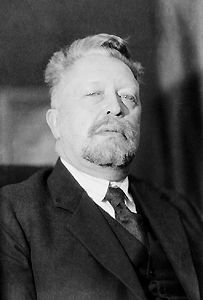


Peterson-Berger, Larsson, Stenhammar
Source: Naxos CD (my rip!)
Format: mp3, 320k/s (CBR), DDD Stereo
File Size: 161 MB (incl. cover, booklet)
Download Link (re-up) – https://mega.co.nz/#!dc5nGBaS!dqthN1VwFmlTxoFxDAW_u1ts2OA2HjvaIaXaCEa Kz6U
Enjoy! Don’t share! Buy the original! 🙂
All three works in this appealing and intriguing collection were commissioned by Princess Edmond de Polignac,
whose maiden name had been Winnaretta Singer (daughter of the inventor of the sewing machine). Through
a "marriage blanc" to the French aristocrat de Polignac, whose family was one of the oldest and grandest
in his country, she was able to draw around her a large coterie of writers, painters and composers. She
was a generous supporter of the arts, e.g. she contributed major sums to Diaghilev’s Ballet Russe.
Many first performances of works she had commissioned took place in soir???es at her house, including
Manuel de Falla’s El Retablo de Maese Pedro (Master Pedro’s Puppet Show), which is indeed
an "opera for marionettes" that Falla wrote for de Polignac’s own puppet theatre! Its story concerns
Don Quixote, who spends an evening in an inn, watching Pedro’s marionettes. There is a strong Spanish
folk element in the score, but both the neo-renaissance and the Stravinsky influences on Falla are
noticeable, too.
Darius Milhaud had long been thinking about a work based on the story of Orpheus, which he finally
set for a quartet of voices and chamber orchestra upon the invitation of de Polignac. In Milhaud’s version,
Orph???e is a healer of men and animals, not a poet or musician, who is killed by Eurydice’s vengeful sisters.
Eurydice herself is a gypsy girl who dies from an illness after having sought refuge with Orpheus in a wood.
Despite the changes in the story, the themes and motivations are close to the source.
Diaghilev was furious when he heard that de Polignac had commissioned a work from Igor Stravinsky,
the "barnyard fable" Renard. He thought that no one else but him was allowed to work with the
Russian composer, but he did turn up at the salon for the premi???re of Renard. Stravinsky’s orchestration
in this folksy music includes an Hungarian cimbalon.
Music by Manuel de Falla, Darius Milhaud & Igor Stravinsky
Played by the Matrix Ensemble, with vocal soloists
Conducted by Robert Ziegler
"El retablo de maese Pedro (Master Peter’s Puppet Show) is a puppet-opera in one act with a prologue and epilogue,
composed by Manuel de Falla to a Spanish libretto based on an episode from Don Quixote by Miguel de Cervantes.
The libretto is a faithful adaptation of Cervantes’s text, from Chapter 26 of the second part of Don Quixote, with
some words edited. Falla composed this opera "in devoted homage to the glory of Miguel de Cervantes" and
dedicated it to the Princess de Polignac, who commissioned the work. Because of its brief length by operatic
standards (about 27 minutes), it is not part of the standard operatic repertoire.
Otto Mayer-Serra has described this opera as a work where Falla reached beyond "Andalusianism" for his immediate
musical influence and colour and began the transition into the "Hispanic neo-classicism" of his later works.
In 1919 Winnaretta Singer, aka la Princesse Edmond de Polignac, commissioned from Falla a piece that could be
played in her salon, at her own elaborate puppet theater. (Her other commissions included Igor Stravinsky’s
Renard and Erik Satie’s Socrate, although neither of those works had its premiere in her private theater.) The
work was completed in 1923. Falla decided to set an episode from Cervantes’s Don Quixote that actually depicts
a puppet play. He wrote his own libretto, cutting and splicing from chapters 25 and 26 of Part II. The protagonist
watches a puppet show and gets so drawn into the action that he seeks to rescue the damsel in distress,
only to destroy poor Master Peter’s puppet theater in the process.
Falla’s original plan for the Princess’s theater was a two-tiered, play-within-a-play approach – large puppets
representing Quixote, Master Peter, and the others in attendance, and small figures for Master Peter’s puppets.
The three singers would be with the orchestra in the pit, rather than onstage. After a concert performance cum
dress rehearsal in Seville in March 1923, that is how it was performed with the Princess’s puppets in the music
room of her Paris estate in June that year, with Vladimir Golschmann conducting. Hector Dufranne sang Quijote
(Quixote), Wanda Landowska played the harpsichord (Falla composed his Harpsichord Concerto for her in
appreciation), and Ricardo Vi???es and Emilio Pujol were among the artists and musicians serving as stagehands.
Also at the premiere was Francis Poulenc, who met Landowska for the first time; she asked him to write a
harpsichord concerto for her, and his Concert champ???tre was the result."
Wikipedia

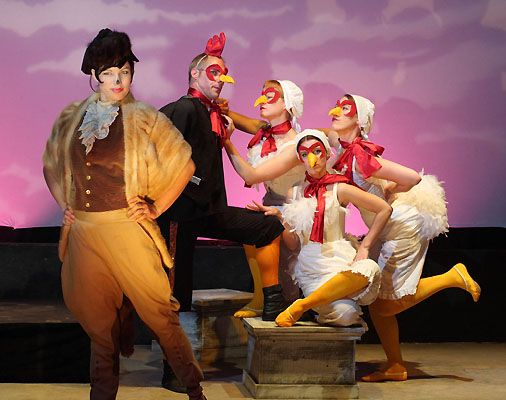
Modern performances of "Maese Pedro" and "Renard"
Source: ASV CD (my rip!)
Format: mp3, 320k/s (CBR), DDD Stereo
File Size: 182 MB (incl. cover, booklet)
Download Link (re-up) – https://mega.co.nz/#!PlwgXLra!Ijn0-nPMgOeKzR_eT6e9YArt8CQ1zYP_t9q19xp96ZQ
Enjoy! Don’t share! Buy the original! 🙂
Thanks for all the goodies!
Ludwig Philipp Scharwenka (1847-1917) was a German composer
and teacher of music. He was the older brother of Xaver Scharwenka.
He was born in Szamotuły (Samter), Grand Duchy of Posen. Like his younger brother Xaver he received his first intermittent
musical instruction in Posen. After the closure of the Gymnasium (college) in 1865 he studied music theory together
with his brother under Richard W???erst and Heinrich Dorn at the new Musical Academy in Berlin where, from 1868, he
himself was taken on as teacher of Theory and Composition. In this period his own first compositions appeared.
In 1874 he brought out an overture and a symphony for the first time in a concert of his own.
In contrast to his brother’s very extrovert compositions, Philipp’s many-sided work has dreamlike and thoroughly moody
inflexions. This is certainly true of the three programmatic works recorded here: the multi-movement Arcadian Suite, as
well as the single-movement tone poems Fr???hlingswogen (Spring Waves) and Liebesnacht (Night of Love).
Scharwenka’s music is typical of German "Hochromantik" (high romanticism) of Schumann, which is the link between
the earlies romantics (like Weber and Mendelssohn) and the freely tonal late-romantic music of Richard Strauss.
Music Composed by Philipp Ludwig Scharwenka
Played by the G???vle Symphony Orchestra
Conducted by Christopher Fifield
"The Swedish Sterling label, when it is on task and the music it uncovers is worthwhile, is really
capable of unearthing some stunning treasures from the vaults of Western music’s less-vaunted past.
Polish composer Philipp Scharwenka was elder brother by three years to Xaver Scharwenka, one of the
most celebrated piano virtuosi in the latter days of the Romantic era and a composer whose works have
enjoyed a second-tier status. His piano concerti and certain short piano pieces have been widely recorded.
The fate of brother Philipp’s compositions doesn’t even rise to the second tier; the 20 (of at least 120)
or so works that have been recorded have only been done one time, mostly on short-lived releases.
Conductor Christopher Fifield and the G???vle Symphony have taken up the gauntlet for Philipp Scharwenka’s
orchestral work, following in the footsteps of an earlier Sterling release that essayed some of Xaver’s
purely orchestral music that in itself is somewhat dwarfed by his output for the piano.
Grove’s notes that Philipp Scharwenka was a "competent, dedicated composer and teacher"; both during his
lifetime and in posterity, the elder Scharwenka exists in the shadow of his younger brother. Part of the neglect
results from the sheer reality that Philipp Scharwenka’s music, at least judging from what is included here, is
strongly derivative of styles and composers around him, particularly that of Wagner and Grieg, the latter
most obviously in the Fr???hlingswogen that opens the disc. Strong echoes of what seems to be Humperdinck
and Tchaikovsky are heard at various points, but Philipp Scharwenka’s compositions precede and do not
antedate such "models." Moreover, the quality of the music is very high; despite its close relationship to
Wagner’s Tristan und Isolde, Scharwenka’s Liebesnacht, a symphonic poem based likewise on the Tristan
legend, is extremely listenable — hard to put down, even. It has a nice and consistent sense of forward
flow and enough genuine inspiration that it makes Grove’s weak assertion that Scharwenka was merely
"competent" seem a little stingy."
All Music
Source: Sterling CD (my rip!)
Format: mp3, 320k/s (CBR), DDD Stereo
File Size: 159 MB
Download Link (re-up) – https://mega.co.nz/#!UABFzZCQ!QScwpT64IZXcQmnYMhDpJSMI_4k1jdPNsl2ylTZ 1CX0
Enjoy! Don’t share! Buy the original! 🙂
Einojuhani Rautavaara is one of the most colourful and diverse figures in Finnish music.
He is an artist of exceptionally broad scope, at once Romantic and intellectual, mysticist and
constructivist. He has gone through a great many stages in his stylistic development, yet he
has combined different stylistic elements in post-modernist fashion within individual works.
Rautavaara began his career under the influence of post-war Neo-Classicism; in the 1950s,
he began to apply twelve-tone procedures and progressed in some works to quite a modernist
idiom. On the other hand, even works written close to each other in time could differ widely in
their approach; for instance, in his Third Symphony, written in the middle of his twelve-tone
period, he gave free rein to the luscious romantic emotion that came to dominate his music
from the late onwards. Since the late 1970s, he has been creating a synthesis of various
stylistic influences. Rautavaara’s extensive and versatile output contains several operas,
seven symphonies, other orchestral works, concertos, chamber music, piano music and
vocal music. Rautavaara has been a major Finnish composer since the 1950s, and has
been steadily gaining in international esteem, especially in the 1990s.
The Cantus Arcticus was commissioned by the ‘Arctic’ University of Oulu for its
degree ceremony. Instead of the conventional festive cantata for choir and orchestra, I wrote
a ‘concerto for birds and orchestra’. The bird sounds were taped in the Arctic Circle and the
marshlands of Liminka. The first movement, Suo (‘The Marsh’), opens with two solo flutes.
They are gradually joined by other wind instruments and the sounds of bog birds in spring.
Finally, the strings enter with abroad melody that might be interpreted as the voice and mood
of a person walking in the wilds. I"n Melankolia, the featured bird is the shore lark; its twitter
has been brought down by two octaves to make it a ‘ghost bird’. Joutsenet muuttavat
(‘Swans migrating’) is an aleatory texture with four independent instrumental groups.
The texture constantly increases in complexity, and the sounds of the migrating swans
are multiplied too, until finally the sound is lost in the distance.
"When the Finnish Broadcasting Company proposed in 1971 that I should conduct one of
my own works in a concert (the title of the concert series being ‘Conducting composers’),
I had an idea for a work that could be different in each performance, created anew by each
conductor. At about the same time, I visited an exhibition by architect Reima Pietil??? entitled
Tilatarha (Garden of Spaces), where the title ‘Regular Sets of Elements in a Semiregular
Situation’ stuck in my mind. It was like something right out of the textbook of the
musical avant-garde of the time, as structuralism was waning and aleatorics was
making an entrance. The units of music in this piece would be regular, precisely notated, but
their action, position and function in the overall structure would be free. Thus, the
orchestra is divided into groups, each of which enters when, and only when, the conductor
cues them in." (Einojuhani Rautavaara)
Music Composed by Einojuhani Rautavaara
Played by the Helsinki Philharmonic Orchestra
With Richard Stoltzman (clarinet)
Conducted by Leif Segerstam
"This marvelous disc contains what unquestionably is the finest available performance of Cantus Arcticus,
Rautavaara’s most popular piece and one of the very best marriages of an orchestra and taped sounds.
For this recording, the birdsong tape seems to have been cleaned up, giving the timbres additional clarity
and purity, and the balance between orchestra and electronics is perfectly judged. The result is simply
gorgeous. I was also struck very strongly by the harmonic resemblance between the finale and the
opening movement of Falla’s Nights in the Gardens of Spain. Listen for yourself and see if you don’t agree!
Garden of Spaces is a sort of sonic sculpture, fully notated but permitting various sections of the
orchestra to time their entrances differently at each performance. Rautavaara has created thematic
material, unlike so many such pieces, that seemingly makes sense given these parameters, and so
the music comes across as coherent, shapely, and quite haunting.
But the outstanding work here is the new Clarinet Concerto for Richard Stoltzman. Rautavaara seems
to have a special feeling for the instrument. In the score of his opera Aleksis Kivi, the composer restricts
the woodwind contingent to two clarinets, used to magical effect, and this concerto certainly ranks among
the most successful in the modern repertoire. While full of virtuosity and some incredibly difficult-sounding
writing in the clarinet’s highest register, the most memorable moments occur where Rautavaara exploits
the instrument’s unparalleled ability to sing in tones of liquid lyricism. The central slow movement in
particular must rank as one of the most purely beautiful in Rautavaara’s (or anyone else’s) entire output.
It goes almost without saying that as the dedicatee Stoltzman plays with total commitment, and as usual
in this series the contributions of Leif Segerstam and the Helsinki Philharmonic are ideal. Excellent sonics,
warm and well-balanced (in the concerto) round out another magnificent contribution to the
Rautavaara discography."
Classics Today http://i1084.photobucket.com/albums/j415/wimpel69/ct_disc-of-the-month_zpsadae7f02.gif
Source: Ondine CD (my rip!)
Format: mp3, 320k/s (CBR), DDD Stereo
File Size: 136 MB + 1 MB (booklet)
Download Link (re-up) – https://mega.co.nz/#!0dYRmAaD!eQxTDn2pSilqgCO-i13hmDs4l0YkQ9KDXEaUYsWwL5I
Enjoy! Don’t share! Buy the original! 🙂
The album’s moniker, Reflections of the Northwest, points to the lifelong fixation of composer/producer
Gregory Short with the music and art of said area, but the subtitle is even more telling: "American
Orchestral Music Influenced by Howard Hanson". In fact, George McKay’s Symphony for Seattle is
particularly characteristic of the big-hearted, Nordic neo-romantic Americana style propagated by Hanson.
Short’s own contribution, The Raven Speaks, is more eclectic and "modern" – inspired by Native American songs.
Like McKay, William Bergsma was a student of Hanson’s Eastman School of Music (Hanson recorded Bergsma’s ballet
suite Gold and the Senor Commandante for Mercury), his serenade To Await the Moon is typical of this
composer’s essentially lyrical style.
Music by Gregory Short, George Frederick McKay & William Bergsma
Played by The Northwest Symphony Orchestra, Seattle
Conducted by Anthony Spain
"The Eastman School of Music is a music conservatory located in Rochester, New York. The Eastman School
is a professional school within the University of Rochester. It was established in 1921 by industrialist and
philanthropist George Eastman, founder of the Eastman Kodak Company.
Today, there are more than 900 students enrolled in the collegiate division of the Eastman School
(approximately 500 undergraduate and 400 graduate students). Students come from almost every state
of the United States, and approximately 25% of students are from foreign countries.
Each year about 260 new students enroll (approximately 135 freshmen and 125 graduate students),
selected from more than 2,000 applicants. Only about 13 percent of applicants are admitted.
About 1,000 students (ranging in age from 18 years to over 80 years of age) are enrolled in the
Eastman School’s Community Music School.
In the 1997 and 2004 surveys conducted by U.S. News & World Report, the Eastman School was
ranked first among graduate school music programs in the United States. In 1994, Eastman tied
with The Juilliard School and the Jacobs School of Music of Indiana University among the
top graduate programs in music."
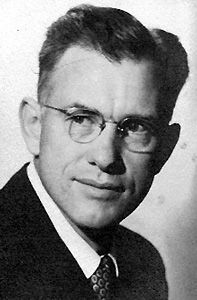

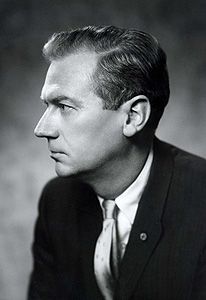
George Frederick McKay, Gregory Short, William Bergsma
Source: Albany Records CD (my rip!)
Format: mp3, 320k/s (CBR), DDD Stereo
File Size: 150 MB (incl. booklet)
Download Link (re-up) – https://mega.co.nz/#!8IhR0aaK!S3C1xyUsZ7SFbdFdjKdDb32xOzBb9X65lxVOvsp Iaq4
Enjoy! Don’t share! Buy the original! 🙂
Let’s turn to something that should be more familiar, especially since James Horner set out to
popularize this composer’s music in the US back in the 1980s. 😉
Together with Prokofiev (another Russian composer whose popularity greatly benefited from the advocacy of James Horner)
and Shostakovich, Aram Khachaturian (1903–1978) was one of the leading composers of
the Soviet Union and the most celebrated Armenian composer. His earliest musical influences came from hearing
folk music in his home town of Tbilisi, Georgia, and for the rest of his life his compositions remained firmly rooted
in Armenia’s cultural traditions. Regional folk melodies and the rhythmical patterns of local dances were a
constant element in all his work; indeed, Khachaturian once said that his harmonic language came from ‘imagining
the sounds of folk instruments with their characteristic tuning and resulting range of overtones’1. His music was
one of the bridges that most effectively connected European and Eastern traditions during the 20th century.
In 1942, he began work on his second ballet, Gayaneh, which reused much material from Happiness.
This richly colourful work was an immediate success, with its unusual instrumentation and choreography successfully
combining aspects of both folk and classical traditions. The composer was awarded the coveted Stalin Prize for the
ballet in 1943. Conceived as a ballet in four acts and six scenes, Gayaneh is a deeply patriotic work, displaying the
composer’s strong sense of Armenian nationalism together with his communist ideals.
The story takes place on a collective farm, where Gayaneh, a young Armenian woman, is married to the
disreputable Giko. She soon discovers he is about to commit treason, which tests her patriotic beliefs against her
personal emotions. However, by the end of the ballet, Giko has been sent to prison, leaving Gayaneh free to marry
the leader of the Red Army Border Patrol, with whom she has fallen in love. In later years, however, the plot was
modified several times, to emphasise romance rather than nationalist zeal.
Their marriage, however, gives Khachaturian the opportunity to include several celebratory dances from
Armenia, Georgia and the Ukraine – including the work’s final whirling, irresistible and well-known Sabre Dance.
By the time Khachaturian started work on his next ballet, Spartacus, in 1950, he had just embarked upon a
conducting career, travelling to over 30 countries giving concerts of his own music. He had also been appointed
to teach composition at both the Gnessin Institute and Moscow Conservatory – so, perhaps unsurprisingly, the
ballet was put on the back burner and took four years to complete.
Spartacus was apparently inspired by an Italian holiday the composer took in 1950, which included a visit to
the Roman Coliseum, where Khachaturian was deeply moved by the life of the gladiator Spartacus. Captured and
enslaved by the Romans in about 74 BC, Spartacus had led an uprising against the Romans and defeated numerous
Roman legions and generals, before finally being killed in battle. Like Gayaneh, however, the ballet is also a love
story, with Spartacus successfully defeating the Roman general Crassus in order to free his enslaved wife Phrygia.
The ballet is one of the composer’s most important post-war works.
Music Composed by Aram Khachaturian
Played by the Bournemouth Symphony Orchestra
Conducted by Kirill Karabits
"Sometimes there is a perfect match between repertoire, conductor, and orchestra: this album is one such example.
Featuring the music from two ballets by Armenian composer Aram Khachaturian, it is very accessible to those who
claim they do not like classical music, as its 20th century tonalities and film score-like qualities completely draw the listener
in. The first track is dramatic and grand, worthy of a gladiator like Spartacus, and it leads into an adagio that is ethereal
with cellos and harps. Conductor Karabits gets a lush expressiveness from the Bournemouth Symphony Orchestra,
teasing out long, sweeping lines in the violins and creating extremes in mood and emotion. Expansive musical moments
are indeed expansive, and poignant moments are appropriately lyrical and tender. Some of the tone color is reminiscent
of Ravel’s orchestral works, and there are strong dynamic contrasts that keep the listener attentive. It does not take
a great stretch of the imagination to visualize the dancers playfully leaping in a bacchanal here, posing in an arabesque
there, or even Baryshnikov pirouetting and tumbling. In Gayaneh, Khachaturian’s interest in folk music is more evident
(like Bart???k, he drew on folk melodies for inspiration). Khachaturian fans may recognize the tune from the B section of
"Sabre Dance" (which actually appears in its entirety later in the album), which is from an Armenian folk melody. The
album concludes with a regal-sounding procession that is indeed a fitting ending, but it surprises the listener by letting
loose into a carnivalesque romp that ends rather suddenly, almost unresolved. One could argue that there is an abundance
of beauty and emotion in this album — dare one go so far as to say schmaltz? — much like in the music of Hollywood
films in their golden age of the 1930s and ’40s. But sometimes the world needs that abundance, especially when it is
played so movingly by a musically sensitive orchestra and conductor."
All Music
Source: Onyx CD (my rip!)
Format: mp3, 320k/s (CBR), DDD Stereo
File Size: 159 MB (inc. cover, booklet)
Download Link (re-up) – https://mega.co.nz/#!QBZRlSQD!UfzKeD09bAbur0jD3FzjekdphIxHbezahY45P-aA8zE
Enjoy! Don’t share! Buy the original! 🙂
Yeah, I liked The Onedin Line a lot, too. 😀
Mario Castelnuovo-Tedesco was one of the most prolific Italian composers of the first half of the twentieth century.
He had established a career as a composer in a number of genres, including chamber music, vocal and choral music, opera,
keyboard music, and orchestral music, before fleeing Europe to escape Nazi persecution. His later years in the United Stated
were devoted largely to writing film scores.
That said, you won’t find his credit except on a handful of movies, like the classic And Then There Were None (Ren??? Clair, 1945) –
that is because he was mostly employed to elaborate the sketches of lesser, but more prominent Hollywood composers
(like Herbert Stothart’s on The Picture of Dorian Gray), so he did a lot of work in Tinseltown anonymously.
Be that as it may, his Violin Concerto No.2, entitled "The Prophets", will delight everybody who loves Jerry Goldsmith’s score for
Masada – and, honestly, who doesn’t. It’s big, broad, with bold gestures and a big-hearted romanticism, steeped in local melody,
that makes it appear positively "cinematic".
Also featured, as an intriguing coupling, is Ottorino Respighi’s best concerto, the Concerto Gregoriano (for violin and
orchestra). While it is less "picturesque" than the Castelnuovo-Tedesco, the neo-baroque, colorfully orchestrated music will no
doubt appeal to film music lovers as well.
Music by Mario Castelnuovo-Tedesco and Ottorino Respighi
Played by the St. Petersburg Symphony Orchestra
With Jos???-Miguel Cueto (violin)
Conducted by Vladimir Lande
"Mario Castelnuovo-Tedesco’s Concerto “I Profeti” and Respighi’s Concerto Gregoriano share a
predilection for the religious ethos of the past; Castelnuovo-Tedesco attempted to evoke a Biblical ethos;
Respighi, according to Nancy Rold???n’s notes (pianist Rold???n has performed “extensively” with Cueto), strove to
free the Gregorian melodies from the Roman Liturgy (given the hand-in-glove fit of the chant to its texts—
which protected it numerous times from attacks within the Church—that might be considered by liturgical
experts an explosive task like separating the oxygen and hydrogen in water).
Violinists of the “golden age” didn’t take up Respighi’s Concerto, though Ingolf Turban recorded the composer’s
Second Concerto, “all’Antica” (Claves 50-9017) and Ruggiero Ricci played the Poema Autunnale on Reference 15.
Takako Nishizaki’s reading of the work with the Poema Autunnale on Marco Polo 8.220152 made it available on CD,
as did Lydia Mordkovich—who also included the Poema Autunnale—on Chandos 9232 (Kurt Stiehler had recorded it
on LP, Urania URLP7100, and Paul Richartz made perhaps the earliest recording on Polydor 1511/4S). My first
impression of the work more than 40 years ago, when I first heard it and borrowed the sheet music from the
library, seemed to be confirmed by relatively more recent reactions to it as somewhat sprawling and lacking in
dramatic force (pace Roger Dettmer, who wrote about the Concerto with vivid thoroughness in 8:1, comparing
it more than favorably with Goldmark’s, Glazunov’s, and Conus’s), though its violin part seems idiomatically
conceived. If it succeeds in incorporating the liturgical melodies it cites in a rich harmonic context, it doesn’t
achieve the same hypnotic effect as does the stylized chanting in the Catacombs in I Pini, though it employs
on occasion similar melodic and harmonic turns. As he does in Castelnuovo-Tedesco’s Concerto, Cueto seems
to succeed more as a violinist in this work than as a declaimer of sacred texts…If Respighi’s bold and splashy
orchestration doesn’t quite fit the essentially contemplative spirit of the chants he’s borrowed, that’s not
Cueto’s fault—nor that of Lande and the Orchestra.
Cueto arranged Carlos Guastavino’s haunting song, “La rosa y el sauce,” for violin and orchestra, and its nearly
five minutes contain a great deal of the entire program’s poetry and immediately appealing, rich lyricism.
Somewhat in the manner of the slow movement of Tchaikovsky’s Concerto and Rachmaninoff’s Vocalise, both
of which it resembles in its ardent simplicity, it achieves its effect with seeming effortlessness—and
so does Cueto.
Cueto, Lande, and Orchestra recorded their program in the Melodia studio, St. Katherine’s Church in
St. Petersburg; but the clear and clean recorded sound doesn’t reveal any swaddling reverberation."
Fanfare
Source: Marquis CD (my rip!)
Format: mp3, 320k/s (CBR), DDD Stereo
File Size: 161 MB
Download Link (re-up) – https://mega.co.nz/#!xQRD0DIa!PrvVShxNdjxYDfMWCTqb-VPN3SopikVvRhZq8kx2Fgw
Enjoy! Don’t share! Buy the original! 🙂
Masao Ohki was born on 3 October 1901 in Iwata, a small provincial city on the Pacific coast in
central Japan, and grew up in the larger nearby city of Shizuoka. His father was a teacher at a girls’ high
school and he spent his childhood during a period when westernisation was bringing an interest in
western music. After completing his junior schooling in 1910, Ohki went on to technical senior high
school in Osaka and majored in chemistry. He was now able to study the shakuhachi with master-players,
and formed a male choral group with his classmates. At the same time he had an opportunity to hear
Beethoven’s Symphony No. 5 and Tchaikovsky’s ‘1812’ Overture. This was his first encounter with
full-scale orchestral music. Deeply impressed by these works, he wished vaguely to write orchestral
music, but lacked the means to pursue this ambition. He therefore started by studying vocal music
more minutely and by writing nursery songs.
The 1930s saw drastic and rapid changes in political affairs. In the wake of the Depression, Japan tried
to form a Japan-centred economic bloc in Asia, which gave rise to militarism and nationalism. Democracy
and international socialism were gradually replaced by the idea that eliminating political influences from
Europe and the United States would bring happiness to the people in all Asian countries as well as in
Japan. In the latter half of the 1930s Ohki came to sympathize with this. His inclination to Japanese
traditional and popular music was, despite his attachment to shakuhachi music, not so much to be
linked with his concern for Japanese labourers and peasants, oppressed by the upper class, as with
his sympathy with Asian people oppressed under colonialism by Europe and the United States.
The Japanese Rhapsody was composed at the request of NHK (Nippon Hoso Kyokai/Japan
Broadcasting Corporation) and was first given in a radio programme on 18 May 1938 by the Japan
Broadcasting Symphony Orchestra (the New Symphony Orchestra, later to become the NHK
Symphony Orchestra) under the composer. The scoring includes double wind, celesta, piano and
various percussion instruments. Here Ohki tried to express the optimism of the Japanese people,
who were going to spread their wings in Asia. The two main themes are drawn from Japanese folk
melodies. One is dance music for a summer festival in Iwakidaira of the Tohoku district, based
on the pentatonic Ritsu scale (E – F sharp – A – B – C sharp), the other is taken from Kisobushi,
a folk-tune from the mountainous district of central Japan, based on a pentatonic Ryo scale (E –
F sharp – G sharp – B – C sharp). The work is in three parts, an Allegro, with a slow introduction,
using elements of Kisobushi, a first theme from the dance music of Iwakidaira, and a second
theme using Kisobushi. This main part is repeated, with variants suggested, and the third part
is a free recapitulation. The work reflects the influence of Stravinsky’s L’oiseau de feu and Petrushka.
Dissatisfied with this line of thinking, he turned again to socialism, opposing the oppression of
the working class at home or abroad. For him the atomic bomb was a symbol of modern imperialism,
which had hindered realisation of the happiness of the labouring class. The full horror of what
had happened at Horishima and Nagasaki was finally revealed with the end of the American
occupation in 1952. The work of the painters Iri and Toshi Maruki and their The Hiroshima Panels
were very good models for Ohki in his desire to express in music the r???le of the atomic bomb in
blocking the way to human freedom, to the future of mankind and to the realisation of the
dream of liberating the labouring class. The paintings, rich in subtle shadings, corresponded to
Ohki’s inclination to ‘cloudy’ sonority. He took up all the six paintings published by 1953 and
by adding Prelude and Elegy to the six movements based on the six paintings, he completed
an eight-movement symphonic fantasy To The Hiroshima Panels in 1953. The work, which
was later renamed Symphony No. 5 ‘Hiroshima’, was first performed by Masashi Ueda
conducting the Tokyo Symphony Orchestra on 1 November of the same year. The Hiroshima
Symphony had a striking impact on Japanese audiences, establishing Ohki as a left-wing
composer fighting against imperialism. He died in 1971.
Music Composed by Masao Ohki
Played by the New Japan Philharmonic
Conducted by Takuo Yuasa
"The composer wasn’t to know, in 1953, that survivors would suffer illnesses even into
subsequent generations, or that bigger and deadlier bombs would be developed within years.
As we face a world still fond of sabre-rattling and leaders who haven’t learned, the message of
Hiroshima is, if anything, even more important. This is a deeply felt symphony, all the more
moving because of its objectivity and universal qualities. It should take its place in the
repertoire of music written in response to war and its devastation. "History repeats itself
for those who don’t listen".
It is all the more fascinating as a human document of Ohki’s personal development. Like most
Chinese and Japanese composers of his time, he was far more influenced by Russian, and
French composers than by the Austro-Germanic style. This isn’t the place to analyse why,
save to say that understanding Russian and French idiom is a key to understanding East Asian
music in this period. This disc therefore usefully transposes the Hiroshima Symphony with Ohki’s
earlier Japanese Rhapsody. This was written in 1938, at the height of the Japanese war against
China. While it’s not military music by any means, its confident handling of "Russian" mainstream
influences and Japanese traditional style, seems curiously archaic now. It is very much a piece
of a bygone, less questioning age. It shows just how far Ohki travelled, both as musician and
as human being. In later years, he would return wholeheartedly to his socialist, pacifist values
with subsequent works such as his Vietnam Symphony. It is to be hoped that this too will
eventually be recorded and released."
Music Web
Source: Naxos CD (my rip!)
Format: mp3, 320k/s (CBR), DDD Stereo
File Size: 125 MB (incl. cover, booklet)
Download Link (re-up) – https://mega.co.nz/#!tYBhRBCY!bV2itmGqBn9BG5vj_9pv6mhfaUdvodEGF2TeIMa fSsw
Enjoy! Don’t share! Buy the original! 🙂
What a way to begin 2013!
Thanks, wimpel!!
Please note that despite the "innocuous" titles, Borup-J???rgensen’s music is a modern*, Western-avantgarde
interpretation of pastoral music. It is very different from the Swedish romantic pastorales uploaded before!
Axel Borup-J???rgensen was born in Hjrring. Denmark, in 1924, but the family emigrated to Sweden in 1927. After taking his
university entrance exam in Linkping and doing his national service, he returned to Denmark where, from 1946 on, he trained as a
piano teacher at the Royal Danish Academy of Music. He also attended courses in instrumentation with Poul Schierbeck and
J???rgen Jersild. Apart from this he is a self-taught composer.
The Swedish cultural milieu, which was open earlier than the Danish to atonal Central European Modernism, was a decisive
factor in the development of Borup-Jrgensen’s lyrical-expressionist style. In fact, in Sommasvit for string orchestra, composed
in 1957, the Swedish background is very close. The title is Swedish (Sommasvit = Sommen suite), the nature scenes have precise
references and specific experiences as background. Sommen is a large, forest-fringed lake area in northern Sm???land, with an inland
archipelago of about 300 islands. On one of these the composer had spent his holidays since his schooldays and had gone on long
excursions by rowing-boat through the spacious lake landscape. The five brief movements of the suite link nature scenes and
weather with the stages of the day.
Sommasvit still has a residue of melody in the form of characterizing motifs. In Nordisk Sommerpastorale (Nordic Summer
Pastorale) of 1964 this has been reduced to just a few passing hints, only to disappear completely in the last two works on
this CD. In 1965, the pastorale, much of it written in the open air in the Swedish summer landscape, won first prize at a
composing competition held by the Danish Broadcasting Corporation. With a bright ensemble the composer wanted to create an
"immediately beautiful" music, an "impressionistic morning mood", passive and immutable in its atmosphere, without drive or
expression, like lying on one’s back and calmly watching drifting summer clouds. It is all about timbre.
Borup-J???rgensen’s painterly orchestral style culminates in Marin. This was composed in 1963-70 – for once for a large
orchestra – and can without reservation be called a major work in his oeuvre. The Swedish title means "seascape". The treatment
of the orchestra is "painterly" throughout, as the finely-honed derails are completely absorbed in the mass effects of flowing
colour and movement. But unlike the pastorale, MARIN is dramatically active music with a developmental form saturated
with contrasts.
For a decidedly Nordic nature lyricist like Axel Borup-J???rgensen the dark sides of the seasons and the climate are at least as
important as summery idylls. Among his works are innumerable winter scenes, and Musica Autumnalis of 1977 depicts
the moods and light of late autumn. The techniques are on the whole as in the two preceding orchestral works, the effect
something quite different. Particularly characteristic is the use of the electronic organ, played partly with the keys in fixed
registers, but just as often in the opposite way, the keys remaining fixed while timbres and intensity are varied by
changing the stops.
* – Actual modern music, not the infantile, Rock-patterend, regressive synth+orchestra drivel by e.g. the
Zimmer factory that some inexperienced listeners erroneously identify as modern!
Music Composed by Axel Borup-J???rgensen
Played by the Danish National Radio Symphony Orchestra
Conducted by Leif Segerstam
"Theocritus’s Idylls include strophic songs and musical laments, and, as in Homer, his shepherds often play the syrinx,
or Pan flute, considered a quintessentially pastoral instrument. Virgil’s Eclogues were performed as sung mime in the
1st century, and there is evidence of the pastoral song as a legitimate genre of classical times.
The pastoral genre was a significant influence in the development of opera. After settings of pastoral poetry in the
pastourelle genre by the troubadours, Italian poets and composers became increasingly drawn to the pastoral. Musical
settings of pastoral poetry became increasingly common in first polyphonic and then monodic madrigals: these later
led to the cantata and the serenata, in which pastoral themes remained on a consistent basis. Partial musical settings
of Giovanni Battista Guarini’s Il pastor fido were highly popular: the texts of over 500 madrigals were taken from this
one play alone. Tasso’s Aminta was also a favourite. As opera developed, the dramatic pastoral came to the fore
with such works as Jacopo Peri’s Dafne and, most notably, Monteverdi’s L’Orfeo. Pastoral opera remained popular
throughout the 17th-century, and not just in Italy, as is shown by the French genre of pastorale h???ro???que,
Englishman Henry Lawes’s music for Milton’s Comus (not to mention John Blow’s Venus and Adonis), and Spanish
zarzuela. At the same time, Italian and German composers developed a genre of vocal and instrumental pastorals,
distinguished by certain stylistic features, associated with Christmas Eve.
The pastoral, and parodies of the pastoral, continued to play an important role in musical history throughout
the 18th and 19th centuries. John Gay may have satirized the pastoral in The Beggar’s Opera, but also wrote
an entirely sincere libretto for Handel’s Acis and Galatea. Rousseau’s Le Devin du village draws on pastoral roots,
and Metastasio’s libretto Il re pastore was set over 30 times, most famously by Mozart. Rameau was an
outstanding exponent of French pastoral opera.[6] Beethoven also wrote his famous Pastoral Symphony,
avoiding his usual musical dynamism in favour of relatively slow rhythms. More concerned with psychology
than description, he labelled the work "more the expression of feeling than [realistic] painting". The pastoral
also appeared as a feature of grand opera, most particularly in Meyerbeer’s operas: often composers would
develop a pastoral-themed "oasis", usually in the centre of their work. Notable examples include the shepherd’s
"alte Weise" from Wagner’s Tristan und Isolde, or the pastoral ballet occupying the middle of Tchaikovsky’s
The Queen of Spades. The 20th-century continued to bring new pastoral interpretations, particularly in ballet,
such as Ravel’s Daphis and Chloe, Nijinsky’s use of Debussy’s Pr???lude ??? l’apr???s-midi d’un faune, and
Stravinsky’s Le sacre du printemps and Les Noces.[7]
The Pastorale is a form of Italian folk song still played in the regions of Southern Italy where the zampogna
continues to thrive. They generally sound like a slowed down version of a tarantella, as they encompass many
of the same melodic phrases. The pastorale on the zampogna can be played by a solo zampogna player, or in
some regions can be accompanied by the piffero (also commonly called a ciaramella, ‘pipita’, or bifora), which
is a primitive key-less double reed oboe type instrument."
Wikipedia
Source: Dacapo CD (my rip!)
Format: mp3, 320k/s (CBR), DDD Stereo
File Size: 133 MB (incl. cover)
Download Link (re-up) – https://mega.co.nz/#!0RASQAwY!PiGQ7zW-mFkJA-cdw10F2krVaBxB61M5KVG8s9QSwU8
Enjoy! Don’t share! Buy the original! 🙂
C???sar Franck is an important composer from the latter half of the nineteenth century, particularly in the realms
of symphonic, chamber, organ and piano music. His stage works were uniformly unsuccessful, though his choral
compositions fared somewhat better. Born in Li???ge (in the French region which in 1830 became part of a new
state, Belgium), on December 10, 1822, he led a group of young composers, among them d’Indy, Duparc, and
Dukas, who found much to admire in his highly individual post-Romantic style, with its rich, innovative harmonies,
sometimes terse melodies, and skilled contrapuntal writing. This group, sometimes known as "la bande ??? Franck,"
steered French composition toward symphonic and chamber music, finally breaking the stranglehold of the
more conservative opera over French music.
Individual and instantly recognizable though his music was, it owes a debt to Liszt and Wagner, especially to the
latter’s Tristan und Isolde and several other late works. He tended to use rather quick modulations, another
inheritance from Wagner, and shifting harmonies. Featured on this album are three distinguished tone poems,
of which the multi-movement Psych??? ist probably the most beautiful.
Music Composed by C???sar Franck
Played by the Basel Symphony Orchestra
Conducted by Armin Jordan
"This recording by Armin Jordan and the Basel Symphony dates from 1986 and is a solid entrant with much to recommend it.
Jordan and his orchestra perform with sensitivity and expression. The "Sleep of Psyche" (track 3) is a long and slow piece
that is performed with refinement and precise ensemble by the group. "The Accursed Hunter" (track 1) is a more showy
piece that receives a well-paced, technically proficient reading that avoids some of the bombasm this work
can sometimes generate. Those are just two of the extremes within an accomplished set of performances."
Amazon Reviewer
Source: Erato CD (my rip!)
Format: mp3, 320k/s (CBR), DDD Stereo
File Size: 119 MB
Download Link (re-up) – https://mega.co.nz/#!8JYHzLrJ!Jemvim02IR1jFDLB0lfarTJ0yxR6FW0rAAj9cJh u1ps
Enjoy! Don’t share! Buy the original! 🙂
Of all the early twentieth century American musical revolutionaries, perhaps composer Henry Cowell wielded the most vivid
and far-reaching influence. Born in 1897 to a rural California family, Cowell began to study the violin at age five,
though his parents’ hopes of creating a prodigy on the instrument remained unfulfilled when the lessons had to
be stopped on account of the boy’s poor health. Until he began musical studies with Charles Seeger at the University
of California at Berkeley in 1914, Cowell remained a basically self-taught musician, as well as a young man who had
never spent so much as a day in school in his life. Seeger was impressed by the young Cowell’s output — over 100
compositions of varying quality by 1914 — but was much more interested in the young composer’s hyper-creative,
open-minded musical personality.
Concert appearances throughout North America and Europe during the 1920s earned Cowell countless friends and
enemies throughout the musical establishment. Although he had earned the respect of such luminaries as Bart???k
and Schoenberg, his concerts frequently caused audience riots and invoked the wrath of critics who wondered if
Cowell’s headstrong independence disguised a lack of true musical craftsmanship. Later music, such as the Amerind
Suite for piano (1939) and the 26 Simultaneous Mosaics (1964) incorporate generous helpings of indeterminacy,
though from the 1930s onward, Cowell’s compositional language grew increasingly tonal and rhythmically simplified.
Cowell died after several years of serious illness.
Included on this album is Atlantis, a suite for chamber ensemble and three vocalists (treated like instruments),
originally intended as a ballet. There are several miniatures (Sound Form No.1, Ritournelle, Reel No.2, Dance of Sport,
Four Combinations, etc.) for various instrumental combinations, all testament to Cowell’s formal and timbral ingenuity.
Most of the music was conceived in collaboration with various choreographers (hence the monicker), including Martha Graham.
While this may not be the most approachable music, surely it holds no more terrors for a 21st century audience. 😉
Music Composed by Henry Cowell
Played by The Californian Parall???le Ensemble
Conducted by Nicole Paiement
"Some of the most revered compositions of the twentieth century arose from the collaboration of composers
and choreographers. Henry Cowell sought solutions that would treat both art forms with equal respect.
Works on this disc-the majority of which are recorded for the first time, many from unpublished manuscripts-
were composed for Doris Humphrey, Charles Weidman (Dance of Sport), Bonnie Bird, and Martha Graham
(Heroic Dance and Suite for Woodwind Quintet).
Atlantis was envisioned as the prologue of a three-part drama on a libretto by Alice Pike Barney to be
choreographed by Doris Humphrey. The three singers are treated as colorful instruments within the
orchestral fabric, the singers enunciating only moans, wails, sighs, grunts, and squeals of ecstasy.
The three piano Ritournelles stem from a performance of Marriage at the Eiffel Tower (text by Jean Cocteau),
choreographed and produced by Bonnie Bird at the Cornish School in Seattle in 1939. John Cage
organized the music for Marriage on the model of Les Six’s 1921 collaboration in Paris, but in this case
with only Les Trois: Cowell, George McKay of the University of Washington, and himself.
Sound Form No. 1, a short quintet for woodwinds and percussion, was intended to accompany the 1937
article in the Dance Observer in which Cowell first proposed the use of elastic forms in the first place.
The recording is completed by the delightful Reel No. 2 (1934), evoking Cowell’s Irish heritage, and by
two pieces not specifically associated with dance: Four Combinations for Three Instruments (1924) and
the Suite for Small Orchestra (1934). The title of Four Combinations refers to the work’s diverse scoring:
violin and cello in movement 1, violin and piano in movement 2, cello and piano in movement 3, and all
three instruments in movement 4. Both this composition and the compelling Suite for Small Orchestra
show Cowell’s more serious side. His use of dissonant counterpoint in these works may well reflect
his studies with Charles Seeger, who pioneered this approach to polyphonic expression.
Program notes are from noted musicologist, Cowell scholar and flutist Leta Miller, who also
organized the project and repertoire."
Source: Mode CD (my rip!)
Format: mp3, 320k/s (CBR), DDD Stereo
File Size: 146 MB
Download Link (re-up): https://mega.co.nz/#!9YYlRAaA!elJE7jGMjUVhTKYdMwLyUGcGBC1qKKo2ZBMH8Qg ZHU8
Enjoy! Don’t share! Buy the original! 🙂
Unchained Melody, Powerhouse, Elevator Music, Inflight Entertainment… just reading the titles, you
would not suspect that this is ‘classical’ music at all. It is exactly the irony Austrialian composer Graeme Koehne
intends, for while he deeply appreciates the history and techniques of ‘classical music’, he laments the
separation and exclusion of influence between popular entertainment and classical tradition which has
developed since the early twentieth century. Indeed, there is a polemical intention behind the use of titles like
these, aimed at undermining the modernist stylistic hegemony over contemporary classical music.
Koehne declares as formative musical influences the music of the Bugs Bunny Show, the whole gamut of
1960s American television and the James Bond movies, and he rates their best composers as masters of
twentieth century music, Carl Stalling, Raymond Scott, Henry Mancini and John Barry chief among them.
The four works recorded here cover a period of more than ten years in the development of this musical
individualism. Unchained Melody (1990) grows immediately out of Graeme Koehne’s feeling that
contemporary music lacked the excitement and enjoyability of pop music. He wanted to seek a way of
fixing the exuberance of this music to the symphony orchestra. To prepare for it, he turned away from his
counterpoint and orchestration texts and studied instead the specialist magazines of pop guitarists, drummers
and keyboard players, and adapted rhythmic and melodic concepts gleaned from these sources.
For this piece, he took the title from an old, and, at the time, relatively obscure, 1950s pop song. He liked the song,
especially admiring its construction, without realising that it had been penned by a composer of outstanding
classical credentials, Alex North, but mostly he liked the association of ‘letting go’ which the title conveyed.
Koehne’s next work in the trilogy, first performed by the Sydney Symphony in 1993, would move further
away from contemporary compositional models, this time germinating from a Rumba rhythm, as he has long
been a fan of the early Latin band-leader, Xavier Cugat. The title, Powerhouse, was chosen in homage to
Raymond Scott, the uniquely humorous and inventive composer featured in many Bugs Bunny soundtracks.
Though there is little trace of Scott’s actual music about the piece, Koehne speaks of aiming to capture a spirit of
bright humour and rapidly varying character for which Scott provides a model.
The final piece of the orchestral trilogy, Elevator Music (1997), grew from Graeme Koehne’s admiration
for the music of John Barry, Henry Mancini and Les Baxter. Here the textures are darker, more dramatic, the
rhythmic power intensified, undercutting the deprecatory ‘elevator music’ tag. In citing the
inspiration of the three popular orchestral composers, Koehne was drawn by their interest, during the 1950s,
in ‘The Beat’, a feeling for driving rhythm responding to rock’n’roll.
The productive association between Graeme Koehne, the Sydney Symphony, its Chief Conductor
Edo de Waart and Artistic Administrator Timothy Calnin during the course of the 1990s culminated in the
concerto for amplified oboe and orchestra, Inflight Entertainment (1999). The piece belies all expectations
of this form, or its title. It is a concerto of symphonic proportions, a showpiece for orchestra as well as the
brilliant soloist for whom it was written, Diana Doherty.
Music Composed by Graeme Koehne
Played by the Sydney Symphony Orchestra
With Diana Doherty (oboe)
Conducted by Takuo Yuasa
"Graeme Koehne admits the influence of several film composers, such as Raymond Scott,
Henry Mancini and John Barry, on his own music-making. Though this may be true to a
certain extent, this should not imply that Koehne considers himself as a “musical illustrator”.
However this nevertheless gives a fairly indication of what Koehne is aiming at. His music is
often tuneful, colourful, expertly scored and directly expressive, without any attempt at
plumbing any great depth. This is music to entertain and to be enjoyed for all it’s worth.
True, it may sometimes sound eclectic, but in much the same way as that of Leonard Bernstein;
another name that comes to mind when listening to these pieces, and one that he does not
mention as another possible model. The music, too, is often set in movement and sustained
by powerful rhythmic ostinati, that might sound as a bit too single-minded, at least for some tastes.
Four beautifully crafted, attractive and unpretentious works by a composer who obviously knows
how to handle orchestral forces to great effect. Very fine performances and recording all round.
A quite enjoyable release."
Music Web
Source: Naxos CD (my rip!)
Format: mp3, 320k/s (CBR), DDD Stereo
File Size: 124 MB (incl. cover, booklet)
Download Link (re-up) – https://mega.co.nz/#!FJg2WYxD!Oyqaait9og8m59mICGKsaS-KsjllSs9mMPoo4ym5Vew
Enjoy! Don’t share! Buy the original! 🙂
Many thanks!
Starting downloading…
Thanks wimpel!!
No.252
Everybody knows Aaron Copland. Either for his distinguished, if relatively few, film scores (The Red Pony, Of Mice and Men,
The City, Our Town, etc.), or, even more likely, for his popular ballets in the "Americana" style: Appalachian Spring, Rodeo,
Billy the Kid. But not too many will be aware of his other works, from the Jazz-influenced pieces of his younger years (like the
Piano Concerto) to the somewhat arid dodecaphonic works with which he, unsuccessfully, tried to reconnect with the avantgarde,
of the 1960s. The two ballets featured here, Grohg and Hear Ye! Hear Ye!, the first purely orchestral, the second with choir
and orchestra, will probably be unfamiliar to many listeners.
Grohg, composed during the time Copland spent in Paris, studying with Nadia Boulanger, was composed in the 1920s inspired
by Murnau’s vampire movie classic Nosferatu. The music betrays influences of jazz and of Stravinsky’s ballets, naturally.
At the time (1924), the music fell into oblivion, and was never performed/recorded until this version prepared for Oliver Knussen
and the London Sinfonietta in 1992! The composer did, however, recycle some its material in later works like the Dance Symphony.
Copland’s 1934 Hear Ye! Hear Ye! was created in collaboration with choreographer Ruth Page. The ballet is a courtroom travesty,
with vocal parts for the witness, attorneys and judge.
Music Composed by Aaron Copland
Played by The London Sinfonietta & The Cleveland Orchestra
Conducted by Oliver Knussen
"Those who adore Copland’s music are certain to welcome these first recordings of the early ballets "Grohg" (his first
symphonic score, undertaken during studies with Nadia Boulanger in Paris) and "Hear Ye! Hear Ye!," written as a
rush-job for the late choreographer Ruth Page.
Inspired by the classic horror film "Nosferatu," "Grohg’s" scenario is morbid stuff, all about a sorcerer-vampire
who brings the dead back to life for his amusement. Copland failed to get his 1922-25 ballet staged and later
recycled the best portions in his "Dance Symphony." Early Stravinsky, jazz and ragtime are the central influences,
skillfully put together by a brashly talented young "modern" clearly out to shock the pants off the establishment.
Not typical (or major) Copland, perhaps, but essential to an understanding of his musical roots. The Cleveland Orchestra
plays it with great rhythmic bounce and snap.
Copland inserted a small portion of "Grohg" into his 1934 courtroom burlesque, "Hear Ye! Hear Ye!," a throwback to his
1920s jazz style, closely bound to the events of its farcical narrative but drolly inventive and entertaining when
listened to as pure music-especially in its jazz-orchestra evocations of cabaret dance.
Knussen and his London ensemble have a great time with the score as well as with the 1924 Prelude, a
chamber-orchestra reworking of the opening movement of Copland’s First Symphony. Hats off to Argo for filling the
remaining gaps in the Copland catalogue so enterprisingly, and for their first-rate recording, too."
Chicago Tribune
Source: Decca "Argo" CD (my rip!)
Format: mp3, 320k/s (CBR), DDD Stereo
File Size: 157 MB
Download Link (re-up) – https://mega.co.nz/#!FBwHESDY!cEQVH3_QzNqFOWlmPga6-iX397JubB8e3k9R5Q9sqLg
Enjoy! Don’t share! Buy the original! 🙂
Russian composer Aaron Avshalomoff (1895-1964) spent nearly thirty years in China, drawn there
by the sounds of its street music, its ancient opera, costumes and legends, all encountered as a child in the
Chinese quarter of Nikolaievsk, his Siberian birthplace. At the outbreak of the Russian Revolution he escaped,
travelling through north China, bound for the USA. But finding life there hard and with the sounds of China
still in his head, he decided to return to the Orient in 1918.
Between then and 1947 Avshalomoff worked to evolve a synthesis of Chinese musical elements with Western
techniques of composing for symphony orchestra and theatre. Making his living primarily as a bookseller, the
self-taught composer wrote and produced his first opera, Kuan fin (Goddess of Mercy) in 1924. During a sojourn
in the USA, from 1925 to 1929, he was able to get it mounted at the Neighborhood Playhouse in New York.
A second work, The Soul of the Ch’in, was performed in Portland, Oregon. Returning to China he continued
composing in the Chinese vein – adopting the full panoply of Chinese percussion instruments and ornaments,
such as grace-notes and slides, which he used to create a considerable body of highly personal works,
brilliantly scored.
The Soul of the Ch’in is a ballet pantomime composed in 1926. The suite presented here follows the general story:
I. Guo Chai’s War Cry. Brass instruments sound the rebel’s victory over the Emperor, Yien Wang. To cut off his retreat
Quo Chai lies in ambush by the lake shore. II. Ming’s Despair. The Emperor has abandoned his castle, accompanied by
Kinsei. This aged favourite musician has brought as a gift a thirteen-stringed Ch’in harp, which has the power to enchant.
In their desperate straits he urges the Emperor to escape across the Lake. III. The Fight (Not in the Suite). IV. Sai Ho’s
Dance. On the troubled waters of the lake, the Soul of the Ch’in appears as a girl dancing in a robe with long scarved
sleeves. She lures Guo Chai into the lake and he sinks. V. The Death of Kinsei. In the starlit silence, the wounded
spirit of the forlorn musician is portrayed by a melody rising like the smoke of incense. As Kinsei falls, the Emperor
comforts him. Kinsei reveals that it was the Harp that saved him from Guo Chai. As Kinsei dies, the Emperor’s
tears slowly fall.
Avshalomoff’s Violin Concerto, also indebted to Chinese pentatonic music, was composed in 1937 when, in July,
Shanghai was under Japanese aerial bombardment. The radiant, often serene beauty of the work belies the conditions
of its creation. Its chamber-orchestra accompaniment is generally transparent, but sonorous in the tuttis. Like
several others, it is dedicated "To Kotka" (kitten), his second wife, Tatiana. Mario Paci led the premi???re on 16
January 1938, with the Shanghai Symphony Orchestra.
The sounds and images of old Peking are evoked in the tone-poem The Hutungs of Peking as we are led through
its byways and broadways, from dawn to dusk. The ancient city awakens gradually to the cries of street-vendors,
the signals of itinerant barber and knife-grinder, and the sing-song of tradesmen at their booths – all growing louder
as they intertwine.
Music Composed by Aaron Avshalomoff (Avshalomov)
Played by the Moscow Symphony Orchestra
With Rodion Zamuruev (violin)
Conducted by Jacob & David Avshalomov
"Aaron Avshalomoff’s biography is one of the most interesting in contemporary music. Born in 1895 in
Nikolayevsk, Siberia, he escaped the Revolution of 1917 through north China before settling in San Francisco.
Previously, he had attended the Stern School of Music in Zurich. Profoundly influenced by the music of China,
he established himself as a bookseller in Beijing, where he began a systematic study of all aspects of Chinese
music. Between 1933 and 1943 he premiered numerous works, many of them recorded here, and worked to
create a musical identity for China distinct from Western influences. He spent the Second World War under
house arrest and finally emigrated to the United States in 1947, where he died in 1964.
His compositions reflect his diverse background. Chinese music prevails, but one can also hear American and
Russian influences. His concertos are his most satisfying works, the Flute Concerto (1948) being a particularly
fine example of his idiom. The flute is well-suited to the melodies Avshalomoff employs and the delicacy of its
tone keeps the orchestration lighter than on some of the other works recorded here. The flute’s material
seems to float above the orchestra, occasionally entering into a dialog with the oboe or the cor anglais, but
never engaging the entire ensemble. Avshalomoff’s development is somewhat unorthodox, partly due to the
nature of the pentatonic melodies inherent in Chinese music, which, as Jacob Avshalomoff suggests, led the
composer to experiment with remote modulations and an episodic structure. Classical Chinese music is often
quite percussive and all these works have passages of great rhythmic drive, especially in the finales.
Avshalomoff enjoyed some recognition in the United States, with performances of some of his shorter works
given by Stokowski, Monteux, and Koussevitzky, who commissioned a work. I suspect he also may have
influenced a generation of Hollywood film composers. However, he never reached the level of popularity he
had in China, and even in China he seems to have become persona non grata after the revolution."
Classical Music Review
Source: Marco Polo CD (my rip!)
Format: mp3, 320k/s (CBR), DDD Stereo
File Size: 154 MB (incl. cover, booklet)
Download Link (re-up): https://mega.co.nz/#!lJhUDCBD!PoZGHhtlwNkO23E5g_OXLTbbdfoed5WIJ3AEEI0 gf9A
Enjoy! Don’t share! Buy the original! 🙂
Another lovely selection of tone poems by Vincent d’Indy: Po???me des Rivage (Coastal Poem)
and the Diptyque Mediterran???en (Mediterranean Diptych) , oscillating between impressionism
and Wagnerian late romanticism.
Music Composed by Vincent d’Indy
Played by the Orchestre Philharmonique de Monte-Carlo
Conducted by Georges Pr???tre
"Vincent D’Indy (1851-1931) had a long life and career and is generally thought of as a late romantic
composer. This very solid disc actually features two orchestral works, the four-movement "Poeme des
rivages" (Poems of the shore) from 1921 and the shorter two-movement "Diptyque mediterranean" from
1926, that date from late in the musician’s career. (The opus number of the latter work is mislabelled on
the CD cover, by the way.) These are D’Indy’s two last orchestral works, with the second one completed
at the age of 75. I’d describe them as atmospheric descriptions of ocean and nature scenes, with limited
thematic content but complex and highly-developed orchestration and use of tone colors. After being
initially puzzled by the unexpected style, I soon realized the two were best approached as modernist
music. So this is an interesting light on a composer who was reviled by younger composers for his
artistic conservatism. It seems as if he changed his thinking somewhat in his later years.
That places the works chronologically and stylistically, but are they any good? I’d say yes to the "Poeme
des rivages". The Poeme is weak from a melodic standpoint but rich in other ways, so I think the perspective
of the listener is important. If you approach it expecting a big late romantic descriptive score with
straightforward melodic content, you will be disappointed. If you approach it as an extension of Debussy’s
most adventurous orchestral scores (without some of Debussy’s harmonic innovations), you will be rewarded.
Personally, the more I’ve listened to this work, the more I’ve grown to appreciate it. Some of the music
is just beautiful. Note that the last 2-3 minutes of the piece (track 4, "The Mystery of the Ocean") are
maybe the strongest passage of the work. But be aware that this is difficult music. I believe the "Diptyque"
is less successful and distinctive. It’s opening strongly recalls the opening of Sibelius’ "Swan of Tuonela".
I found the pentatonic-ish main theme, used in both movements, to be a little hackneyed. The orchestration
is however very fine, just as in the "Poeme".
Georges Pretre is an absolutely excellent conductor. Every time I listen to one of his discs, I am impressed
by his musicality and sense of balance. The Monte Carlo Philharmonic isn’t one of the world’s premier orchestras
– I’d like a little more tightness in the ensemble – but the woodwinds and brass play very well and the final
product is satisfying and allows one to appreciate the subtle beauties of D’Indy’s scores. The recorded sound
is absolutely excellent. This is a committed, successful effort devoted to obscure music. Thank you to all involved.
A recommended disc for the sophisticated classical listener. If you’re a fan of French 20th-century music,
you’ll absolutely want to hear it."
Amazon Reviewer
Source: EMI France CD (my rip!)
Format: mp3, 320k/s (CBR), DDD Stereo
File Size: 104 MB
Download Link (re-up) – https://mega.co.nz/#!FRgxjKBb!WyhIgznfHNBCt03TbhOMMAi5NcA0yWHeUl1rBBY csFk
Enjoy! Don’t share! Buy the original! 🙂
Although mostly a showcase for contemporary composer William Thomas McKinley, this album also
contains a Morton Gould rarity: his light hearted Hosedown suite, scored for actor(!), narrator and orchestra.
Music by William Thomas McKinley and Morton Gould
Benjamin Bradlee (narrator)
Jeffrey Silberschlag (trumpet)
David Statter (narrator)
Michael Tolaydo (actor/Fire Chief)
Royal Liverpool Philharmonic Orchestra
Gerard Schwarz (conductor)
London Symphony Orchestra
Jeffrey Silberschlag (conductor)
"Jeffrey Silberschlag has distinguished himself in the world of music, performing as a conductor and
trumpet soloist with leading orchestras throughout Europe, the United States, Russia, China, Japan,
and Israel. His performances have been described as “compelling” by Germany’s K???lnische Rundschau;
“extraordinary” by Italy’s L’Arena; and “outstanding” by Fanfare magazine.
Mr. Silberschlag has recorded with the London Symphony Orchestra, London Philharmonic, Czech Radio
Orchestra, Warsaw Philharmonic, Royal Liverpool Philharmonic, Seattle Symphony, and the Maryland
Bach Aria group.
He celebrates New Year’s Day 2008, directing a gala concert of Mozart with famed Italian pianist soloist
Bruno Canino and the Orchestra of Piemonte in Northern Italy’s 13th Century Cathedral “San Domenico”.
And, 2008 sees the inaugural season of the new Music Conservatory based in Alba Italy that he directs.
The conservatory which is the product of the Alba Music Festival and St. Mary’s College of Maryland’s
relationship, partners with the Geneva Conservatory, Royal Scottish Academy of Music and Drama –
Glasgow, Trossingen Hochschule, the University of the Performing Arts –Kyoto to provide talented
students an international education that blends the best of the European and American systems . January
2008, will also bring the release on Albany Records of his recording of Boris Blacher’s Chamber Opera,
Romeo and Juliet
Highlights of Maestro Silberschlag’s 2006/2007 season include his performances with State Symphony of
Romania of Bacau which were part of the celebration of Romania’s entrance into the EU. In May, he
directed I Virtuosi della Teatro alla Scala (principal players drawn from Milano’s famous La Scala Orchestra)
and the Romanian Symphony of Arad at Italy’s Alba Music Festival. Also in 2007, Mr. Silberschlag founded
a series of international master classes that are offered as part of the River Concert Series music festival.
Artists from the Chicago Symphony, Baltimore Symphony, Zurich Opera, Italian National Symphony,
among prominent soloists such as Giuseppe Nova, Brian Granz, and Orlando Roman will come to Maryland.
Mr. Silberschlag is currently music director and conductor of the Chesapeake Orchestra and River
Concert Series. Now in its tenth season, the River Concert Series has engaged and entertained
over 350,000 concert goers in its annual season of seven summer concerts. In addition, he is co-director
of the USA-Italy MusicFestivalheld in Alba, Italy. The Alba music Festival produces over fifty concerts
from May through August bringing to the Piemonte region of Italy, international orchestras and renowned
soloists, together with aspiring young artists.
Mr. Silberschlag has also appeared as the guest conductor of Orchestra Filharmonici di Torino and with
the Symphony Orchestra of Romania on tour in Sicily. He led the “Orchestra di Tre Mondi” in concerts in
Beijing, Shanghai, and Dalian, China and recorded with the London Philharmonic at St. Luke’s. In addition,
Mr. Silberschlag conducted the Italian National Opera Orchestra in Italy and appeared in Tokyo and Kyoto.
Maestro Silberschlag collaborated which such soloists as Francesco De Angelis, Jos??? Cueto, Mikhail
Gantwarg, Hilary Hahn, Yi Jia Hou, and Lara St. John (violinists); Sandro Laffranchini (Cellist); Maria
Kanyova (Mimi in NYC Opera’s “La Boh???me” as seen on “Live from Lincoln Center”); Tonna Miller (Metropolitan
Opera soprano); Maxym Anakushin, Leon Bates, Bruno Canino, Brian Ganz, and Boris Slutsky (pianists); John
Wallace (trumpet); Giuseppe Nova and Yoshimi Oshima (flutists); Catrin Finch and Gwyneth Wetink (harpists);
Judy Blazer (Broadway vocalist); Vonda Shepard (blues vocalist); Ethel Ennis and Jane Monheit (Jazz vocalists)
and Terrence Blanchard (Jazz Trumpet). In addition, Mr. Silberschlag has combined musical genres by
blending orchestra performances with such artists as Blues guitarist Linwood Taylor, the Paul Reed Smith
Dragons, the No Class Today Bluegrass Band, and the Brazilian band, Grupo Saveiro.
Mr. Silberschlag also recorded William Thomas McKinley’s “And the Presidents Said” with narrator Ben
Bradlee (Vice President of the Washington Post) and the London Symphony Orchestra at Abbey Road
Studio. In a recent “Fanfare” review of the recording, Mr. Silberschlag was lauded as “a virtuoso
trumpeter par excellence (whose) conducting is equally praise worthy.”
Mr. Silberschlag has performed a wide range of repertoire from the works of Bach through Mahler and
Strauss. He has also been a champion of new music premiering works of such prize winning composers
as Lou Karchin, David Froom, Scott Wheeler, Chou Wen-Chung, Jaan Raats, Chen Yi, William Thomas
McKinley, Philip Glass, Lorenzo Ferrero, Ludovico Einaudi, Vivian Adleberg Rudow, Kenji Bunch, Elliot
McKinley, Paul Chihara, Judith Shatin, Jeffrey Mumford and he has revived important works by American
composers Morton Gould, Charles Griffes, William Schuman, and George Whitefield Chadwick.
Jeffrey Silberschlag has been a prominent trumpet performer on the international music circuit since he
was eighteen. He has recorded as trumpet soloist with the London Symphony Orchestra, Royal Liverpool
Philharmonic, Seattle Symphony, Czech Radio Orchestra, Warsaw Philharmonic, and the Maryland Bach
Aria Group. His next recording is with the Toronto Chamber Orchestra for Naxos. Mr. Silberschlag has
held principal trumpet positions with the Italian National Symphony RAI-Tornino; Jerusalem Symphony;
and the New York City Opera-National Company. A graduate of the Manhattan School of Music, Mr.
Silberschlag studied with such trumpet icons as William Vacchiano, Gerard Schwarz, Pierre Thibaud,
and Robert Nagel. Many composers have dedicated works to him, including William Thomas McKinley,
Paul Chihara, Morton Gould, Loreno Ferrero, Robert Hall Lewis, Ludavico Einaudi, James Cohn, David
MacBride, Leo Eylar, Roger Davidson, John Carbon, and his colleague at St. Mary’s College, David Froom.
A faculty member since 1988, Mr. Silberschlag serves as artistic director and head of music performance
at St. Mary’s College of Maryland and holds the Steven Muller Distinguished Professor of the Arts, Chair.
Additionally, he is now Artist-in-Residence of the Maryland Youth Symphony."
Source: MMC CD (my rip!)
Format: mp3, 320k/s (CBR), DDD Stereo
File Size: 147 MB
Download Link (re-up) – https://mega.co.nz/#!MFgWjDCD!Wzm6uTiVwaPESpSbadLNX0UoWqsnCZlZ5dOsynn mvpY
Enjoy! Don’t share! Buy the original! 🙂
Thanks again for these rarities!
@Wimpel69, I was thinking – would you be so kind as to post some stellar orchestral transcriptions too?
Blogger Musical (Beautiful Classical Music): Stokowski ??? Encores – Chandos (http://i-bloggermusic.blogspot.gr/2012/09/stokowski-encores.html)
Stokowski Encores (http://www.theclassicalshop.net/Details.aspx?CatalogueNumber=CHAN%209349)
Never been a great fan of Stokowski’s arrangements (including his Pictures at an Exhibition) anyway.
No.256
We already got to know French composer Florent Schmitt through the upload of his masterpiece The Tragedy of Salom??? earlier.
He composed a lot of worthy music, most of it forgotten until very recently. This is certainly true of his stage music for
William Shakespeare’s Antony and Cleopatra. Schmitt’s score covers all the impressionistic bases, with all the expected
exotisms one would seek in such a subject present. Unlike Debussy in La Mer e.g., Schmitt aims for a more forceful
style here, ripe with orchestral climaxes at every opportunity. Mirages, a descriptive work for orchestra also inspired by
classical mythology, is, if anything, even bolder and more strident in its chiaroscuro. Great stuff here!
Music Composed by Florent Schmitt
Played by the Orchestre National de Lorraine
Conducted by Jacques Mercier
"Those who know the "orientalist" compositions of Florent Schmitt will need no prodding to purchase this CD.
The "Antoine et Cleopatre" suites are in the same mould as "Salome" and "Salammbo" — but with even more
vivid orchestral colors and drama (if that seems possible). What’s more, this new recording by Jacques
Mercier and the Lorraine forces leaves the older Segerstam/Rhineland Orchestra recording on Cybelia
totally in the dust. Musical moods range from dramatic to contemplative to stormy, with a particularly
exciting Bacchanale movement. The sheer wash of orchestral sound reminds us again of just how
effective an orchestrator Schmitt was — certainly one of the absolutely best practitioners in the first
half of the 20th century.
The filler item "Mirages" — also written in the early 1920s — is interesting in that it is an orchestral
version Schmitt made of two piano pieces he had composed a couple years before. The "Pan"
movement is particularly effective.
If you like impressionistic/late romantic French music with a splash of Russo/Germanic flavor, you’ll
absolutely love this disk. As this is an imported item, I recommend you get it now, before it goes
out of circulation."
Amazon Reviewer
Source: Timpani CD (my rip!)
Format: mp3, 320k/s (CBR), DDD Stereo
File Size: 134 MB
Download Link (re-up) – https://mega.co.nz/#!BVgBUSrJ!Q37I2wHQr1KjbjnPZzItzDUDRRAlJleHpXEJf20 cbVw
Enjoy! Don’t share! Buy the original! 🙂
Never been a great fan of Stokowski’s arrangements (including his Pictures at an Exhibition) anyway.
And annoyingly he did quite a lot of them (well nigh 200)….
STOKOWSKI???S TRANSCRIPTIONS: PERFORMANCE SETS (http://www.mola-inc.org/Stokowskicatalog.htm)
Not that I’m opposed against posteriors like that one, per se. 😉
———- Post added at 03:45 PM ———- Previous post was at 02:45 PM ———-
No.257
In some ways, Paul Hindemith is the odd-man-out among the group of the most important 20th century classical
composers, to which he so clearly belongs: Part of that has to do with his emotionally detached style. Whether
it was the expressionism of his younger years, his own definition of "Gebrauchsmusik" (music for everyday use),
the clear-cut contours of his style – neither endeared him to the general public, though he was widely praised
among his peers. More damagingly, perhaps, he continued to churn out new works long after his inspiration
had evaporated, solely relying on his superb craftsmanship. The result were often works that said nothing
in particular, but did so in a very clear and polished manner. Also, it seems he was not a pleasant man:
A friend of mine who played under him as a student characterized him as a "Giftzwerg" (arsebite).
No reservations, professional or personal. exist with regard to the three masterpieces featured on this album (and many other albums,
as a "standard" Hindemith collection would almost always include these three works): the Mathis der Maler Symphony
is actually a suite of symphonic interludes from the composer’s large-scale opera Mathis der Maler (the Painter).
It’s a powerful and intensely emotional piece (thus, rather uncharacteristic of most of the composer’s ouevre).
Like the suite from the ballet Noblissima Visione, it is very colorful and direct in expression. The Symphonic
Metamorphoses on Themes of Weber, well, it’s just fancy talk for "Variations on Themes of [Carl Maria von] Weber".
And this is a superb account under Claudio Abbado.
Music Composed by Paul Hindemith
Played by the Berlin Philharmonic Orchestra
Conducted by Claudio Abbado
"Abbado has a perfect understanding of the two essential requirements in Hindemith’s scores:
beauty of sound and a sense of urgency which will bring Hindemith’s cerebral inventions to life.
I’m not aware that Claudio Abbado has conducted a great deal of Hindemith in his career, and on
the evidence of this splendidly realised new recording, this has been our loss. He has a perfect
understanding of the two essential requirements in Hindemith’s orchestral scores: beauty of sound
(the opening of the Mathis der Maler Symphony is ample evidence of this) and a sense of urgency
which will bring Hindemith’s often cerebral inventions to life.
The Berlin Philharmonic plays the Mathis der Maler Symphony – which it premiered 61 years ago –
with great feeling and also displays the degree of virtuosity required in the Symphonic Metamorphoses
on Themes of Carl Maria von Weber (the jazzy interlude in the ‘Turandot’ scherzo is quite breathtaking).
Abbado’s speeds are a touch quicker than Wolfgang Sawallisch’s in his recent Philadelphia recording
on EMI (reviewed in the July issue of BBCMusic Magazine) and the general effect is thus rather
tighter and more brilliant.
DG’s recording team does ample justice to the splendour of the Berlin Philharmonic sound, especially
in the sonorous Passacaglia from Nobilissima visione. Elsewhere, Abbado’s flair and grasp of Hindemith’s
wry, quirky sense of humour pays great rewards. I’ve rarely heard any of this music sound quite such fun.
Performance: 5 (out of 5), Sound: 5 (out of 5)"
BBC Music Magazine
Source: Deutsche Grammophon CD (my rip!)
Format: mp3, 320k/s (CBR), DDD Stereo
File Size: 150 MB
Download Link (re-up) – https://mega.co.nz/#!pUo1XDDR!Jhlf0gp1D3PbKIHENZATtFiTLopV9JfmmexVAhU Q8YU
Enjoy! Don’t share! Buy the original! 🙂
Paul Le Flem (1881-1984) was a French composer and music critic. Born in Brittany and
living most of his life in Lezardrieux, Le Flem studied at the Schola Cantorum under Vincent d’Indy
and Albert Roussel, later teaching at the same establishment, where his pupils included Erik Satie
and Andr??? Jolivet. His music is strongly influenced by his native Brittany, the landscape of
which is reflected in most of his work.
Before World War I, Le Flem produced several major works, including his First Symphony, a
Fantasy for Piano and Orchestra, and an opera. The war temporarily put an end to his
compositional activities, and in its aftermath he devoted himself to music criticism and
choral conducting. He wrote numerous articles for the periodical "Comoedia".
In 1938, he began composing once again. Three additional symphonies and a second opera
followed before he was finally forced to give up composition in 1976, at the age of 95, due
to blindness. He died on 31 July 1984 at the age of 103.
Featured on this album are his (non-programmatic) 4th Symphony, a suite of character
pieces entitled Children’s Pieces, the memorial work Pour les morts and the
film score The Great Gardener of France.
Music Composed by Paul Le Flem
Played by the Rheinische Philharmonie Koblenz
Conducted by James Lockhart & Gilles Nopre
"Even to professional musicians in this country, Paul Le Flem is known (if at all) only as having lived to the
age of 103 and having been among the leading composers of Brittany, a region which is reflected in many
of his works; but his music itself has remained an almost completely unknown quantity here. We should
thank our own James Lockhart and the S???dwestfunk radio station (where this recording was made) for
opening our ears to a composer of real stature, with something to say and an accomplished technique to
say it with. The facts that he was a product of the Schola Cantorum, succeeded Roussel, his teacher, as
professor of counterpoint there, and had earlier studied philosophy at the Sorbonne, might create the image
of an earnest academic figure; but his admiration for Debussy and his successful careers both as a music
critic and as a choral conductor (including a spell as chorusmaster at the Op???raComique) brought him far
wider artistic horizons, and the present disc—reasonably well played (even if the strings don’t sound entirely
at ease in the symphony) and very well recorded in a warm but lucid acoustic—reveals him as an impressively
thoughtful and skilful composer.
The seven Pi???ces enfantiries (originally for piano), some of them incorporating Breton turns of phrase, are
charming; Pour les morts, a threnody after the First World War, is predictably sombre, showing an inventive
and sensitive ear for instrumental sonorities and a convincing sense of structure; but the remarkable
Fourth Symphony, composed in 1971 at the age of over 90, is advanced in idiom (eschewing dodecaphony,
with which he had experimented, but leaving behind all traces of impressionism) and violent in mood. The
sinewy tautness of style in this seems to be an inheritance from Roussel."
Gramophone
Source: Marco Polo CD (my rip!)
Format: mp3, 320k/s (CBR), DDD Stereo
File Size: 137 MB (incl. booklet)
Download Link (re-up) – https://mega.co.nz/#!IdglABDB!dlnVVkxiMpVbun0uScJpQ1mhCipQOVGKNgxWnCY twFI
Enjoy! Don’t share! Buy the original! 🙂
Although he left only a handful of compositions at the time of his death, in an avalanche while skiing in the
Tatra Mountains, Mieczysław Karłowicz (1876-1909) yet ranks among the most important Polish composers of the
generation that came to be fronted by Karol Szymanowski. Karłowicz’s all too brief career was taken up with a series
(though not intended as such) of symphonic poems that evince a strong attraction to the pantheistic and existential
tendencies as found in the philosophers Schopenhauer and Nietzsche, together with the attributes of solitude and
an emotional pivoting between fervent affirmation and stark despair which tend to be a natural corollary to such thinking.
Composed in 1904, Powracające fale (Returning Waves) formed the template for all of Karłowicz’s
subsequent pieces. Its evocative but determinedly vague title is open to various interpretations. The composer
himself initially hinted at youthful memories being recollected in sadness, while just months before his
death he wrote in explicit terms of suicide provoked by unrequited love, quoting from Turgenev to that effect,
but any more concrete connection between this and his own ‘intended’ suicide in the subsequent skiing accident
must remain a matter of speculation. The present work unfolds over five continuous sections, and are given
their formal focus by a three-note motif that discreetly affords unity however elaborate the music’s textures and
opulent its expression.
Much the shortest of all Karłowicz’s symphonic poems, Smutna opowieść (A Sorrowful Tale) took shape
between April and July 1908. Again, a scenario of fateful recollection and suicide is attendant on the music
(though this may have been occasioned by the suicide of the composer’s friend, playwright Jozafat Nowinski),
and the subtitle Preludes to Eternity implies a Nirvanalike withdrawal from the ‘real world’ whose musical
antecedents go back as least as far as Wagner’s Tristan und Isolde.
Completed early during 1906, Odwieczne pieśni (Eternal Songs) remained the only one of Karłowicz’s
symphonic poems to be structured in clearly separated movements. Furthermore, there is not even a speculative
programme which can be applied directly to the music, though various indications in the autograph that appear
alongside the movement titles tend to suggest a Schopenhauerian process of self-extinction and
diffusion, a confirmation, no doubt, of the composer’s increasing attraction to the environment of the Tatra
Mountains as the source for his inspirations.
Music Composed by Mieczyslaw Karlowicz
Played by the New Zealand Symphony Orchestra
Conducted by Antoni Wit
"Mieczyslaw Karlowicz was a significant talent, and his early death in 1909 (at age 33) was a serious loss
to 20th century Polish music. His symphonic poems are typically refulgent late-Romantic works, full
of ambition and, to be frank, pretension. Consider the three parts of Op. 10 (Eternal Songs): Song of
Everlasting Yearning; Song of Love and Death; Song of Eternal Being. Heavy-duty stuff, and there’s
no point in pretending that Karlowicz, talented as he was, did full justice to the program, but the point
is that he tried, tried hard, and produced gobs of richly entertaining music in the process.
Antoni Wit’s first disc of tone poems was exceptional, and this one is excellent as well, if a hair less
outstanding than previously. What problems there are stem from having the New Zealand orchestra
rather than Wit’s own Warsaw forces. Of course the New Zealanders play very well, and are well
recorded, but their string section lacks the luxuriance that the music ideally requires, and while some
listeners may prefer a leaner basic sonority, what Karlowicz really asks for is Strauss on steroids
(i.e. Korngold and that crowd). Still, you won’t find better performances of this music than Naxos’
edition, and you can purchase this second volume with complete confidence."
Classics Today
Source: Naxos CD (my rip!)
Format: mp3, 320k/s (CBR), DDD Stereo
File Size: 147 MB (incl. cover, booklet)
Download Link (re-up) – https://mega.co.nz/#!sdgBjCwJ!e9MjcQ9b05xweG_Js8fJc0J4rdkIm2aWEa8eN7f _E4s
Enjoy! Don’t share! Buy the original! 🙂
I wonder why so few of his works have been recorded…
Sure:
No.260
Written in the latter half of 1906, and given its premi???re by Grzegorz Fitelberg in Warsaw on 25 February 1909
(just seventeen days after the composer’s death), Lithuanian Rhapsody had a genesis that goes back
to 1900 when Karłowicz collected much of the material while on vacation at his family estate. He stated, “I
tried to pour into it all the grief, sadness and eternal chains of this people whose songs had filled my childhood”,
and a sense of nostalgia mingled with regret is everywhere apparent. Out of sepulchral gestures in lower
woodwind and strings emerges an undulating motion that prepares for the first melody, which sounds
evocatively on flutes and clarinets. The remaining woodwind and strings gradually enter to fill out the
instrumental texture, before the work heads into its second section with a more expressive theme that is
shared between the strings, though latterly adorned by some piquant woodwind contributions. This ushers
in a short-lived climax, before drawing into a third section of langorous repose. A serene melody now appears
on strings, casting its beneficent aura over proceedings, before a sudden flourish brings the fourth section
and a lively new theme (audibly related to the previous melody) that leads to the work’s principal climax.
Composed during the greater part of 1907, and first performed by the composer in Warsaw on 27 April 1908,
Stanisław and Anna Oświecimowie was to become the most successful, both critically and publicly,
of Karłowicz’s symphonic poems and went on to retain a place in the Polish orchestral repertoire until long
after his death. It was inspired by a painting by Stanisław Bergmann, which draws on the seventeenth-century
legend concerning the incestuous love between two siblings. Stanisław at length journeyed to Rome where
he gained the Pope’s blessing on their union, only to return home to find his sister dead. He himself died soon
afterwards, and they were buried in the chapel at Krosno. Karłowicz evokes this sad tale in a piece drawing
on elements of sonata design to give it formal focus and expressive consistency.
Karłowicz’s final symphonic poem, Episode at a Masquerade, has a complex and uncertain history.
The composer had worked on the piece from October 1908 until his death the following February, leaving an
autograph which apparently extended for 473 bars. Fitelberg took this in hand in the summer of 1911,
working on a completion for over two years that finally had its premi???re in Warsaw on 11 February 1914.
Unfortunately the autograph disappeared during the Second World War, making it impossible to deduce from
the extant sketches just how ‘interventionist’ his completion really is. Even the title is not confirmed in
Karłowicz’s correspondence, though his contemporaries agree that its subject-matter revolves around the
tense encounter between estranged lovers and their inability to sustain a rapport in the surrounding activity.
Karłowicz treats this as an extended sonata form, whose reprise and coda are realised by Fitelberg with
great imagination if not necessarily in accordance with the composer’s actual intentions.
Music Composed by Mieczyslaw Karlowicz
Played by the Warsaw National Philharmonic Orchestra
Conducted by Antoni Wit
"Mieczyslaw Karlowicz’s six symphonic poems feature gobs of Straussian sonority in loosely
organized forms, and while Antoni Wit’s performances are actually a touch slower than the competition
on Chandos, the playing of the Warsaw Philharmonic is so much more atmospheric, richly textured,
and knowing than that of the BBC Philharmonic under Gianandrea Noseda that the music is
transformed. In classic Romantic fashion, the programmatic basis of all of this music is darkly tragic
(for example, Stanislaw and Anna have an incestuous love affair and the story naturally ends in death).
Wit clearly understands the idiom and milks the music for all it’s worth. Thus, the celebratory
sequences in Episode at a Masquerade have an extra degree of feverish brilliance, and the
repetitious opening of Lithuanian Rhapsody is spellbinding rather than merely monotonous–in short,
these forces make the best possible case for Karlowicz.
This is a young man’s music–he was only in his early 30s when he died in 1909–full of self-indulgent
excess; but it’s also brimming with promising talent. This sumptuously engineered production
reminds us of just what a loss his early death represented for 20th-century Polish music, while
allowing us to savor his all too meager legacy."
Classics Today http://i1084.photobucket.com/albums/j415/wimpel69/p10s10-4_zps74ec1a58.gif

Karlowicz loved skiing and mountaineering. Eventually, the former killed him.
Source: Naxos CD (my rip!)
Format: mp3, 320k/s (CBR), DDD Stereo
File Size: 152 MB (incl. cover, booklet)
Download Link (re-up) – https://mega.co.nz/#!pMRxyZQQ!ZL8s7jLh94YxBWpdOmGv0g5n_PdtXboFYdVHv1K PEOM
Enjoy! Don’t share! Buy the original! 🙂
Jazeps Vitols (Joseph Wihtol), distinguished Latvian composer and teacher, was born in
Valmiera, Latvia on 26th July, 1863. He died in L???beck, on 24th April,1948. His remains were
returned to Riga in 1993. Vitols grew up in a schoolteacher’s family. His parents’ support made
it possible for him to study at the famous St Petersburg Conservatory at the age of seventeen.
In 1886 he graduated in composition from the St Petersburg Conservatory, where his principal
teacher was Nikolay Rimsky- Korsakov. Immediately thereafter he joined the faculty of the
Conservatory , where from 1901-1918 he was full professor. Among his students were Sergey
Prokofiev, Nikolai Miaskovsky, and Vladimir Shcherbachov.
The Dramatiska Uvertira (Dramatic Overture), Opus 21, is dedicated to Anatoly Ladov.
Composed in 1895, it received its premiere on 9th March, 1896 under the baton of Rimsky-Korsakov.
The Overture is written as a ballad in the form of a sonata allegro. Although clearly influenced by the
"Mighty Five" Russian composers, Borodin, Cui, Balakirev, Rimsky-Korsakov and Mussorgsky, Vitols
brings to this work his own forms of self-expression.
The Fantazija par Latviesu Tautas Dziesmam (Latvian Folk-Song Fantasy) was composed in
1908 as Fantasy for violin and piano and dedicated to his friend and col1eague from the St
Petersburg Conservatory , Ovanes Nalbadjan. In 1910 Vitols orchestrated the Fantasy and published
it as his Opus 42. The Fantasy in form resembles a concerto. The concerto genre was practical1y
unknown in Latvia at the time, and the prominent violin part in this Fantasy established a precedent
for concerto writing. Vitols incorporated his love for Latvian folk- music in this work, utilising some
folk melodies he had arranged earlier in his career.
The tone-poem, Spriditis (a little boy named Spriditis (Tom-Thumb)), Opus 37, was composed
in 1907 and dedicated to the famous Latvian sculptor, Gustavs Skilteris. It received its first
performance on8th March, 1908 in St Petersburg under the direction of Felix Blumenfeld. In 1911
this piece received the Glinka Prize. The programmatic content for this tone-poem comes from the
play by the Latvian writer Anna Brigadere. On the face page of the score the composer provides a
synopsis of the plot: "Once upon a time lived a little boy named Spriditis. He lived in his grandmother’s
hut. Spriditis becomes bored with carving wooden spoons and tending sheep, and dreams of foreign
lands and carefree life. The overture shows us the heroic moments of the boy’s adventures after he
decides to leave the hut. While searching for hidden treasures, Spriditis is attracted by wood fairies
with their tiny lights. He has to fight demons to gain the favours of the princess. Discouraged by
their magic tricks, he dreams of his homeland and finally rushes home to grandmother where the
little boy finds real happiness in the tiny hut."
The suite, Dargakmeni (Jewels), Opus 66 was composed in 1924 and dedicated to his friend
Alexander Glazunov. The first performance took place in Riga on 6th November, 1924, under the
direction of Teodor Reiter. The suite consists of five short contrasting movements, colourfully
orchestrated. Vitols’ handling of the colours and contrasts shows his ability to imbue his music with
sophisticated and scintillating expression. The presence of choreographic ideas in this suite is more
obvious than in any other of Vitols’ works. The famous Latvian dancer and choreographer Beatrise
Vignere asked the composer to write the music in the form of a suite, so that it could be
transformed into a dance piece.
The ballad, Rudens Dziesma (Autumn’s Song) was composed in 1927 and dedicated to the
Latvian composer Janis Medins. It was first performed in Riga on 18th November, 1928, under the
direction of Emil Kuper. The ballad Rudens Dziesma is written in sonata allegro form and certainly
ranks as one of Vitols’ greatest symphonic compositions. Broad and expansive is the sound of
the orchestra in this score.
Music Composed by Jazeps Vitols
Played by the Latvian National Symphony Orchestra
Conducted by Dmitry Yablonsky
"Vitols (or Wihtols) is likely to be better known (or less unknown!) as one of the teachers of
Miaskovsky and Prokofiev rather than for his own music. His is a Latvian voice but we would do
well to remember him in the same company as Borodin and Glazunov. He was a pupil of Rimsky
at St Petersburg but became the centre of the musical universe in Riga from 1918. The turbulent
days of 1944 saw him leave for Germany where he died in L???beck.
The Dramatic Overture is a slice of Slavonic gloom (think Tchaikovsky 5) mingled with the expectant
mists of dawn. Add a helping of Glazunov’s Symphonies 4 and 8 and some coaxing horn climaxes
this amounts to some very attractive stuff.
Zarins way with three-movement Fantasy is quite brilliant. The work and the performance are alive
with fairy-tale poetry and tuneful grace. In practice this operates as a light-on-the-palate violin
concerto rather like the Glazunov or Prokofiev 1: a little charmer with passion and display never far
off. Another brother from a later generation is the violin concerto of fellow, Latvian Ivanovs. Zarins
has recorded this work on Campion. Do hear this piece.
Spriditis is Tchaikovskian in the manner of the lilting wistful drama of the ballets – especially Nutcracker
crossed with The Seasons and Mendelssohn’s Midsummer Night’s Dream. Pointful woodwind writing
stalks the pages creating a soundworld close to Glazunov with resolute emotion – a far from stern approach.
Jewels is a delightful light music suite: 1. Amethysts (a bird spreading and beating its wings in the
sun – a touch of the grand Spartacus theme); 2. Emeralds (glinting bright); 3. Pearls; 4. Rubies;
5. Diamonds (a waltz – longest movement and the weakest.). Movements 3 and 4 are less than
one minute in duration.
Autumn Song (dedicated to Janis Medins another Latvian composer) is effusive in a Straussian way
with a touch or two of Scriabin. It comes across as a hybrid of Don Juan and Balakirev’s Tamara.
The orchestra are excellent at every turn though the string tone would have benefited from greater
muscle. The recording has excellent impact and detailing.
Whether we will ever hear Vitols’ Symphony (1886-88) or the tone poem Feast of Ligo remains to
be seen. I am interested and I recommend this disc to anyone looking for rewarding music of a
slavonic caste.
Recommended with confidence."
Music Web
Source: Marco Polo CD (my rip!)
Format: mp3, 320k/s (CBR), DDD Stereo
File Size: 157 MB (incl. cover, booklet)
Download Link (re-up) – https://mega.co.nz/#!FUAgULaA!S1ElhCV3CSiPJvGSqTcYsk8JPy41XDYshJVCcbN 4_iM
Enjoy! Don’t share! Buy the original! 🙂
John Casken was born in Barnsley, South Yorkshire, on 15 July 1949 and read Music
at the University of Birmingham, studying Composition under John Joubert and Peter Dickinson.
From 1971-72 he studied in Poland with Andrzej Dobrowolski at the Academy of Music in
Warsaw on a Polish Government Scholarship. It was during this time that he began to have
regular consultations with Witold Lutosławski with whom he formed a close association and
friendship, and about whose music he has written and lectured.
Casken’s works range across every genre and the titles of his works reveal that he can be
inspired both by literature and legend, and by landscape and painting. The libretto for his first opera,
Golem, based on the Jewish legend, was written by the composer in collaboration with Pierre
Audi, who commissioned and directed the work for the 1989 Almeida Festival. Golem has received
six further productions since 1989. Maharal Dreaming is an orchestral "afterthought" to that opera.
The opening work, Darting the Skiff, is a maritime piece for strings inspired by a poem by
Gerald Manley Hopkins. While it is not strictly descriptive, there are many haunting moments
surely inspired by the sea itself. Vaganza is a suite for large ensemble plus organ, cast
in six contrasting movements that include an "Archaic Dance" and other vignettes seemingly
inspired by dance (the composer know that after his premiere, there would be Stravinsky’s
L’histoire du soldat). Casken’s music is in an accessible contemporary style and relies
on color and contrast for its effects.
Music Composed and Conducted by John Casken
Played by the Northern Sinfonia of England
"What might Tippett’s two great works for string orchestra have been like if they had been composed
now? With its warm, saturated string sound, fidgety counterpoint and occasional glimpses of the numinous,
Casken’s Darting the Skiff (1992-3), an ambitious, freely evolving fantasy inspired by the movement of
boats and glances of light on Lake Como, bears not a passing resemblance to the Concerto for Double
String Orchestra and the Corelli Fantasia. But, like the product of any good post-modernist, it offers a
more oblique experience, one of indirect statement and ellipsis rather than glowing, ecstatic optimism.
It’s none the worse for that, but it does mean that instead of liberating the ‘big tune’ hinted at in the
work’s final section, Casken ends his absorbing, enigmatic work on a note of fugitive inquiry. Vaganza
(1985), an ‘extravaganza’ for a larger, mixed ensemble with a prominent, often zany, part for chamber
organ, could hardly be more different. An exuberant, fantastical work, full of exotic colours and multiple
stylistic references ranging from medieval dance to jazz, it shows the full gamut of Casken’s imaginative
interests: he’s not just the glum northerner that recent works such as his Cello Concerto and 1993
Prom piece, Still Mine, might suggest. Maharal Dreaming, an orchestral spin-off from his prize-winning
opera, Golem, makes an attractive filler. Confident playing from the Northern Sinfonia."
Classical-Music.com
Source: Collins Classics CD (my rip!)
Format: mp3, 320k/s (CBR), DDD Stereo
File Size: 132 MB (incl. artwork, booklet)
Download Link (re-up) – https://mega.co.nz/#!QMok2Z6A!E3cMonnCyNpTZ7We0eTMXz38i3M_uzY0WYPj0_V nL8M
Enjoy! Don’t share! Buy the original! 🙂
Joseph Rheinberger (1839-1901), an influential German romantic composer, organist, conductor, and teacher,
was the son of the Prince of Liechtenstein’s treasurer Johann Peter Rheinberger. His exceptional musical gifts
astounded his first teacher, Sebastian Pohli, who instructed him from the age of five. As a child, Rheinberger
progressed so rapidly that by the time he was just seven, he was already an organist in his hometown of Vaduz.
Rheinberger worked for a while as a coach at the Munich Court Opera, witnessing Wagner’s premiere of Tristan und Isolde.
In 1867, he was appointed professor at the conservatory — a position he would hold until his death. His own music
is clearly indebted more to the "Hochromantik" (high romanticism) of Schumann than it is to Wagner’s more freely
tonal, progressive late romanticism.
Wallenstein, a four-movement "tone poem in symphonic form", was inspired by Friedrich Schiller’s drama trilogy.
In the trilogy, Schiller addresses the decline of the famous general Albrecht von Wallenstein, basing it loosely on actual
historical events during the Thirty Years’ War. Wallenstein fails at the height of his power as successful commander-in-chief
of the imperial army when he begins to rebel against his emperor, Ferdinand II. The action is set some 16 years after the
start of the war, in the winter of 1633/1634 and begins in the Bohemian city of Pilsen, where Wallenstein is based with
his troops. For the second and third acts of the third play the action moves to Eger, where Wallenstein has fled and
where he was assassinated on 26 February 1634. One movement each is devoted to "Wallenstein’s Camp" and
"Wallenstein’s Death", and there is a movement for the daughter, "Thekla", too.
The Seven Ravens is a fairy-tale opera based on the story as told by the Brothers Grimm. A peasant has
seven sons and no daughter. Finally a daughter is born, but is sickly. The father sends his sons to fetch water for her,
in the German version to be baptized, in the Greek version to take water from a healing spring. In their haste, they
drop the jug in the well. When they do not return, their father thinks that they have gone off to play and curses
them and so they turn into ravens.
Music Composed by Josef Rheinberger
Played by the Frankfurt/Oder Philharmonic Orchestra
Conducted by Nikos Athin???os
"Rheinberger’s Wallenstein Symphony may not be an entirely original idea since another composer,
Bedrich Smetana, also wrote an orchestral work around the same time entitled Wallenstein’s Camp.
The work was once named by Hermann Kretzschlmar as (according to the excellent notes) "one of
the most substantial program symphonies of the conciliatory tendency." Weighing in at about 55
minutes for the entire work, it is broken into four sections: Prelude, Thekla, Wallenstein’s Camp,
and finally, Wallenstein’s Death. The key of D minor, alone, sets a certain tone to the work. The
music is beautifully structured, indicating Rheinberger’s outstanding tutelage. The composer began
work on Wallenstein in 1866, aged 26 or 27, when the musical wheels were grinding away with the
grandness of an acutely inspired mind through the opulence of Romantic poetry and paintings, not
to mention music composed by Rheinberger’s contemporaries. Still, he had a mind of his own and
was not afraid to expose it.
Poor Rheinberger, he died in November 1901 just who weeks before his retirement, and as Harald
Wanger notes, "Munich lost one of its most distinguished musical represenatives." After the composer’s
death, more and more of his music (oddly) fell into oblivion most likely due to a new century and new
kinds of music-making. Rheinberger’s should have survived much longer than it did.
The other work is the the Prelude to his opera, The Seven Ravens, inspired by paintings on the fairy
tale of the same name by Moritz von Schwind. Usually Engelbert Humperdinck is credited with writing
the first German fairy tale opera, but Rheinberger actually had that master beat. Rheinberger felt that
the prelude could stand on its own two feet and be heard in orchestral concerts. (The opera has gone
on to oblivion.) This is an eminently listenable work full of rich ideas and sonorities, entirely enjoyable
and appealing especially if you are devoted to music from the Romantic period."
Classical Music Guide Forum
Source: Signum CD (my rip!)
Format: mp3, 320k/s (CBR), DDD Stereo
File Size: 141 MB
Download Link (re-up) – https://mega.co.nz/#!UYIAmIQI!L0ebGigLuTkPng7W2N4uWGu3Phkd_8WhHaUnQsL M9U4
Enjoy! Don’t share! Buy the original! 🙂
Hi, I re-up
82 DepositFiles (http://depositfiles.com/files/ec5ydy2jf) – BLOCHDEUXPSAUMES.rar / DepositFiles (http://depositfiles.com/files/xv43xc2yp) – BLOCHPOEMS.rar
83 DepositFiles (http://depositfiles.com/files/medu872yg) – BOEHESYMPHONICPOEMSVOL1.rar
91 DepositFiles (http://depositfiles.com/files/u5w0o0013) – LILBURNAOTEAROAmp3.rar
93 DepositFiles (http://depositfiles.com/files/2cx9go1o9) – GOMEZANDALAGOSmp3.rar
94 DepositFiles (http://depositfiles.com/files/c6whqsdyy) – GOULDFALLRIVERmp3
95 DepositFiles (http://depositfiles.com/files/mgnkdzexg) – MAGNARDWORKSmp3
The links are in 320 kbps without covers.[COLOR="Silver"]
———- Post added at 02:15 PM ———- Previous post was at 02:15 PM ———-
I’ll replace the original links with those.
(Aaaaand, done!) 🙂
A collection of charming and colorful Icelandic orchestral works, all premieres at the time, by
P???ll Is???lfsson (Festival March, Festival Overture), Arni Bj???rnsson (Romanza), J???n Leifs
(Galdra-Loftur Suite), and Karl Otto Run???lfsson (On Crossroads Suite).
Music by P???ll Is???lfsson, Arni Bj???rnsson, J???n Leifs & Karl-Otto Run???lfsson
Played by the Iceland Symphony Orchestra
Conducted by Petri Sakari
"The Finnish conductor Petri Sakari was born in Helsinki in 1958 and started his musical studies
as a violinist, later embarking on a conducting career at the age of fourteen. He studied first in
his home town at the Tampere Conservatory and graduated in conducting at the Sibelius Academy
in 1981 under Jorma Panula, and later also as a violinist. He undertook further study at the Aspen
Music Festival in the United States and attended seminars with Franco Ferrara in Siena and with
Rafael Kubelik in Lucerne. He is a frequent guest conductor with leading Finnish orchestras such
as the Finnish Radio Symphony Orchestra and other leading Scandinavian orchestras, and also
conducts opera and ballet, notably the Finnish National Opera and the Gothenburg Opera.
Outside Scandinavia he has conducted in England, Germany, Holland, Hungary, Romania,
the United States and Mexico. From 1988 to 1993 he was Chief Conductor and Music Director
of the Iceland Symphony Orchestra, continuing as Principal Guest Conductor and returning as
Chief Conductor from 1996 to 1998. In 2000 he was appointed Chief Conductor of the G???vle
Symphony Orchestra in Sweden. Petri Sakari has conducted the Iceland Symphony Orchestra
on several foreign tours and has recorded with the orchestra the complete symphonies of Leevi
Madetoja, symphonies and orchestral works by Sibelius, and works by Uuno Klami, Hugo Alfv???n,
Edvard Grieg and Icelandic composers, notably J???n Leifs."
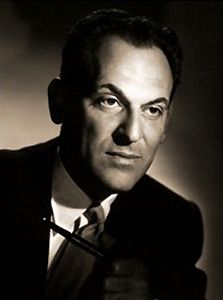

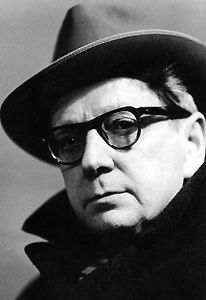
Karl-Otto Run???lfsson, P???ll Is???lfsson, J???n Leifs
Source: Chandos CD (my rip!)
Format: mp3, 320k/s (CBR), DDD Stereo
File Size: 158 MB (incl. cover, booklet)
Download Link (re-up) – https://mega.co.nz/#!5QBjHQpA!M0P2xjwY3R5wBrsrMnntozWUFKNqw0wBXGCM6hN 9C0c
Enjoy! Don’t share! Buy the original! 🙂
Stokowski’s transcription for The Engulfed Cathedral is just flat out beautiful… and I added a little sweetner to this down load featuring another take on that work.
Many transcriptions are worthy. Many composers many transcriptions of their own work. Ravel did it for Bolero.
Vaughan Williams did a charming version of The Lark Ascending for piano & violin. Bach rewrote all his stuff into different works… he liked money.
a re-arrangement done by the composer himself and one done by another composer 200
years later are two different animals entirely]. Ravel’s version of Pictures e.g. is brilliant,
while Stokowski’s is, frankly, as dull as a flat tire. 😉
There seems to be a craving around here for big-scale choral symphonies/symphonic cantatas, no doubt because of the
recent trend to throw a choir on top of the orchestra in every epic/adventure/scifi film score (a lamentable trend, if you’d ask me).
So let’s indulge in that particular genre of classical music for a little while, beginning with a contemporary work:
No.265
Jeff Manookian (*1953) is an American composer, who, like the better-known Alan Hovhaness(ian), is of Armenian descent.
And like the late colleague, he is interested in his ethnic/musical roots. Thus, he wrote a symphony-cantata on the plight of
his people, whose country had long been at their mercy of the Ottoman Turks, who ruled over Armenia from the 16th to the
20th century, and it all ended (if modern Turks like to hear it or not) in a genocide against the Armenian people, in which
half of them were murdered. The Symphony of Tears carries the listener through the tragic events and deeply felt
emotions of the Armenian holocaust. This work endeavors to honor the dead of this horrific event, comfort its survivors,
educate the public about this tragedy, promote hope for the future of all peoples and console those who have suffered
or are the progeny of the crimes of hate.
Much to my surprise, I found out later (i.e. 20 minutes ago) that the symphony and two recordings, including
the one on Albany, are in the public domain and can be downloaded (including the full score and parts) from the IMSLP:
Symphony of Tears (Manookian, Jeff) – IMSLP/Petrucci Music Library: Free Public Domain Sheet Music (http://imslp.org/wiki/Symphony_of_Tears_%28Manookian,_Jeff%29)
Likewise, the Concerto for Flute and Orchestra can be downloaded from IMSLP in an mp3 version at 256k/s:
Flute Concerto (Manookian, Jeff) – IMSLP/Petrucci Music Library: Free Public Domain Sheet Music (http://imslp.org/wiki/Flute_Concerto_%28Manookian,_Jeff%29)
Music Composed by Jeff Manookian
Played by the Armenian National Opera Orchestra and Chorus
With Vahan Harutunian (boy soprano), Narine Ananikian (mezzo-soprano)
And Laurel Ann Maurer (flute)
Conducted by Jeff Manookian & Karen Durgarian
"Not only is the Armenian Philharmonic Orchestra a world-class musical ensemble, these musicians sincerely
care about the music they produce. It is an indescribable joy to conduct and work with my friends and
colleagues of the APO. My annual visits to Yerevan to conduct this orchestra, indeed, recharge my
musical “batteries” for the entire year. Among my collaborations with other orchestras across the globe,
my music making with the APO always remains the most memorable."
Jeff Manookian
Source: Albany Records CD (my rip!)
Format: mp3, 320k/s (CBR), DDD Stereo
File Size: 181 MB (incl. cover, booklet)
Download Link (re-up): https://mega.co.nz/#!RV4BjAIY!fm7quEIFfgSiyp1M2-y8Eit1bqxyVrhQ0CMg68c13YY
Enjoy! Don’t share! Buy the original! 🙂
Noam Sheriff, one of Israel’s most versatile and world renowned musicians, was born in Tel Aviv in 1935.
He studied composition and conducting in Tel Aviv (Paul Ben-Chaim), Berlin (Boris Blacher) and Salzburg
(Igor Markevitch) and philosophy at the Hebrew University, Jerusalem.
Since the 1957 premiere of his work Festival Prelude by the Israel Philharmonic Orchestra under Leonard Bernstein
at the opening of the Mann Auditorium in Tel Aviv, his works have been regularly performed in Israel and all over the world.
In Noam Sheriff’s music one finds an original solution to the fusion of East and West, of musical elements from ancient
Mediterranean cultures and from the West. Among his most significant works are the three scale vocal compositions that
form a trilogy. Mechaye Hamethim (Revival of the Dead) which was premiered in Amsterdam by the IPO in 1987,
based on the Jewish East-European traditional music as well as on the ancient oriental Jewish themes of the Samaritans.
Sephardic Passion, which was premiered in Toledo, Spain, by the IPO, Zubin Mehta and Placido Domingo in 1992,
is based on the music of the Sephardic Jewry. Psalms of Jerusalem was premiered in 1995 in Jerusalem to open
the 3000 year celebrations of that city with its four choirs around the hall singing in Hebrew and Latin.
Mechaye Hametim is a powerful symphony-oratorio that is contemporary in technique, but highly communicative
at the same time (not a given in "modern" music!). This version was recorded at the time of the premiere.
Music Composed by Noam Sheriff
Played by the Israel Philharmonic Orchestra
With Joseph Malovany (tenor), Lieuwe Visser (baritone)
And The Dutch Men’s Choir & Ankor Children’s Choir
Conducted by David Porcelijn
"Sung entirely in Yiddish and Hebrew, Noam Sheriff’s Machaye Hametim is almost a requiem for the millions
who were murdered during the Holocaust. Mr. Sheriff was commissioned by Bernard Bronkhorst, a Dutch-born
Jewish patron of Jewish arts, to serve as a monument to the victims of the Holocaust. The first moment was
titled Jewish Life in the Diaspora (until the Holocaust). Our children’s chorus of girls sang with sweet optimism,
setting up an ephemeral sense of hope. Of course, history finishes that story, and the second movement
entitled The Holocaust is where the fire and brimstone really comes through in the music. This movement
in particular was a rushing torrent of musical turmoil that was, at times, a bit difficult to listen to. Only
because we know exactly what each minor note stands for and the pain behind it. "
Examiner
Source: IMP Classics (my rip!)
Format: mp3, 320k/s (CBR), DDD Stereo
File Size: 120 MB
Download Link (re-up) – https://mega.co.nz/#!pBIUHSza!ZCGvgyV1Kzp_llMZAutCWR8CeTVB1WznWnhJm3S OJ7Y
Enjoy! Don’t share! Buy the original! 🙂
Jeajoon Ryu (*1970) belongs to the most prominent composers of his generation and has wide-ranging
musical and extramusical interests. He studied composition with two great masters – Professor Sukhi Kang in
Seoul (South Korea) and Professor Krzysztof Penderecki in Krak???w (Poland). He also received a Ph.D. in Music
from the Music Academy in Krak???w.
Immediately after the Korean War (1950-53), Korea was a country in ruins. The country had suffered tremendously
from the ravages of war, and people despaired for their future. This desperate situation, however, was seen as a
great opportunity by the post-war generation, who strove to create a new Korea. The Sinfonia da Requiem was
composed as a tribute to those who have devoted themselves to the development of Korea and who strove for
the greater prosperity and international reputation of our country.
Jeajoon Ryu’s Violin Concerto (2006), was premi???red in December 2006 during the 13th International Festival
‘Laboratory of Contemporary Music’. Despite the composer’s use of modern expressive devices, this is a
work of truly Romantic provenance. Jeajoon Ryu seems to have been inspired by the music of his eminent teachers
and mentors, as well as by the European musical tradition, particularly of the turn of the nineteenth century,
employing the best features of that legacy while treating them in a creative way.
Music Composed by Ryu Jeajoon
Played by the Polish Radio Warsaw & Podlasie Opera Symphony Orchestras
With Kim Inhye (soprano), Kim Soock (violin)
And the Polish Radio Choir, Krak???w & Camerata Silesia
Conducted by Łukasz Borowicz & Piotr Borkowski
"Although composer Jeajoon Ryu is Korean, he studied with Krzysztof Penderecki in Krakow,
and Naxos’ Jeajoon Ryu: Sinfonia da Requiem appears to be the debut of his music on disc.
It features Ryu’s ambitious choral-orchestral Sinfonia da Requiem, Op. 11 (2008), paired
with his Violin Concerto No. 1, Op. 10 (2006); although soprano soloist In-Hye Kim in the
Sinfonia da Requiem and violinist So-Ock Kim are both Korean, everyone else in this
production — conductors, choruses, and orchestra — are Polish. Certainly the music sounds
more Polish than Korean, but the situation to which the Sinfonia da Requiem is addressed
altogether to Ryu’s mother country; it is written in honor of the generation of Koreans to
whose lot befell the task of rebuilding Korea in the wake of the 1950-1952 war. The Sinfonia
da Requiem is accomplished and impressive; Ryu has learnt well from Penderecki, although
this is even more conservative overall than Penderecki generally is. At times, its harmonic
palette is reminiscent of Franz Schreker and later Franz Schmidt, latter-day romantic composers
with one foot placed in the modern. The Violin Concerto is a loosely focused, single-movement,
20-minute long work, here played by violinist So-Ock Kim, a young violinist well known in Europe;
this appears to be the first CD release to feature her. Kim has clearly studied her role and,
when she is above the ensemble, makes a strong showing in the work.
The Sinfonia da Requiem’s stylistic derivations might render hearers with more patrician tastes
in regard to the Western classics a little fidgety, and there are a couple of plain, tonal
cadences in both works that are used as a sort of stylistic device, but they are weak and
don’t really fit. But Sinfonia da Requiem is undeniably a very listenable piece, and contains –
– particularly during the "Dies irae" — some moments of genuinely novel and beautiful writing.
And while some of the surface elements may seem derivative, Ryu’s thematic ideas, and his
treatment of them, are not. While that might not quite constitute the "magisterial assurance"
alluded to in the back panel blurb of the CD, the Sinfonia da Requiem is nevertheless a
compelling and dramatic experience and should please a wide range of classical listeners."
All Music
Source: Naxos CD (my rip!)
Format: mp3, 320k/s (CBR), DDD Stereo
File Size: 142 MB (incl. covers, booklet)
Download Link (re-up) – https://mega.nz/#!lRUhUY6R!t19-iQLoEh6k5BBlU9Ss955teGMojr8u6-fQTFZG_hs
/>
Enjoy! Don’t share! Buy the original! 🙂
I was looking foward for a nice Satie’s Gymnopedies Orchestral version, and the Abravanel one is great
May I e-mail you the links so you can post them here after I rip the discs? I am not terribly familiar with Ned Rorem’s work to know if his work fits the context of this thread.
No.268
Dov (Dubi) Seltzer, Israeli composer and conductor, born in Romania (1932), began studying music
at an early age. He studied theory and harmony with professors Alfred Mendelssohn and Michael Jora. When Seltzer
immigrated to Israel at age 15, a musical comedy he had written continued to be played for two more years,
performed by one of Bucharest’s professional Youth Theaters. Seltzer finished his high school studies in Kibbutz
Mishmar HaEmek in Israel. At the recommendation of the pianist and teacher Frank Peleg, Seltzer was awarded
a scholarship to continue his musical studies at the Haifa Conservatory and later in Tel Aviv.
Seltzer embarked on a continually active musical career, writing in particular for the musical theater. He has also
written the music scores for more than 40 full-length feature films, among them Israeli, American, Italian, German
and French productions. Seltzer has to his credit several symphonic works commissioned and performed by the
Israel Philharmonic Orchestra and the Jerusalem Symphony Orchestra. He has conducted both orchestras in
concerts of his own works – the first Israeli composer to be thus recognized and honored. His works were
performed by all the major Israeli orchestras as well as by the New York Philharmonic, the Queens Symphony
and the British Chamber Orchestra. His works were conducted and played by artists such as Zubin Mehta,
Kurt Masur, Yehudi Menuhin and Yitzhak Perlman.
The tragic event of Prime Minister Yitzhak Rabin’s assassination was an event that rocked the country, and
placed it in a deep state of shock. This inspired Israeli artists with an outpouring of commemorations, but
none quite as unique as the classical choral work Lament for Yitzhak. Also known as “A Requiem
for a Man of Peace” the text and music faithfully reflects Yitzhak Rabin’s life work and direction, in addition
to his tragic death. This is a scathing statement against violence and war and an anthem of peace, love
and understanding between peoples. Although a prayer of remembrance, the "Lament" is not a religious
work. Despite some of the texts having been taken from Jewish prayers, it still has a secular character to it.
It is also quite clearly a film composer’s work as it frequently indulges in lengthy, descriptive orchestral
passages which are more colorful and melodramatic than the title of the work would suggest.
Music Composed by Dov Seltzer
Played by the Israel Philharmonic Orchestra
With Sharon Rostorf (soprano), Hadar Halevi (mezzo-soprano)
And Vincenzo LaScola (tenor), Haya Samir (folk singer)
And The New Israeli Opera Chorus & The Ankor Children’s Choir
Conducted by Zubin Mehta
"Since traditional Jewish funeral prayers have nothing to correspond to a Requiem, the five parts of this
creative musical piece were adapted from a basic Christian Requiem, while removing any content that refers
to Christian ideology. The Jewish prayers included in the piece parallel Requiem Masses that can be found
throughout many different periods, which also shows how Christian liturgy was probably inspired by
Jewish prayers.
The five movements of the work are:
El Maleh Rahamim – Merciful God (equivalent to KYRIE ELEISON)
Yom HaDin – Day of Reckoning (DIES IRAE)
Hallel – Praise: (GLORIA)
Kinah – Lament (LACRIMOSA)
Ya’aseh Shalom – He Who Makes Peace (DONA NOBIS PACEM)
This work was also performed in July of 1999 at the Lincoln Center Festival in New York by the New York
Philharmonic Orchestra, with the Philadelphia Chorale Choir and the Harlem Boys Choir under the baton
of Maestro Kurt Masur. At the conclusion of this performance, the audience gave the work a standing
ovation. Most recently, a performance of the work took place in Rome in November 2009 with the
Italian Symphony Orchestra, the children’s choir of St. Cecilia and the National Academy Choir of
St. Cecilia conducted by Maestro Lorin Maazel."
Source: Helikon CD 8my rip!)
Format: mp3, 320k/s (CBR), DDD Stereo
File Size: 156 MB
Download Link (re-up) – https://mega.co.nz/#!epRhzIrI!DpqnmjnLoawu4K02fWySRnPWIzsPlhyDKufbQWR xyUc
Enjoy! Don’t share! Buy the original! 🙂
The three works recorded on this disc bear witness to an acutely sensitive artist’s
response to the pity and terror of war in the twentieth century. Benjamin Britten’s passionate
pacifism generated a whole succession of significant compositions – one is tempted to
refer to them as a cycle, so close is their thematic and musico-dramatic interdependence.
Here, we have another composer whose works have been a favorite of James Horner’s for a long time. 😉
The Latin text of the Requiem Mass for the Dead, with its message of peace beyond death, fired his
imagination in the creation of two powerful works in this vein. On the one hand, it
provided him with a formal frame in the composition of a purely instrumental symphony, the
Sinfonia da Requiem, written when he was still a young man; on the other
hand, it inspired him in middle age to the creation of a huge choral symphony which
must be considered a twentieth-century masterpiece – the War Requiem. The
monumental aspect of the Latin text joined to the human individuality and tenderness of
Owen’s poems seemed at the time of the War Requiem’s first performance to be as daring
as it has since seemed natural and inevitable.
It is remarkable how the Ballad of Heroes – a pi???ce d’occasion for a Festival of Music for
the People in 1939 – looks forward to its more weighty successors and provides a
glimpse of characteristic things to come in Britten. Clearly, for example, the formal design
of this close-knit piece was something of a trial run for the Sinfonia da Requiem, and its
spatial use of off-stage music anticipates this device in many later works, including the War
Requiem.
The emotional curve of the Sinfonia da Requiem, now enlarged to epic proportions, is
also that of the War Requiem. And now the anxious tritone has become the leading motif
of a whole musico-dramatic conception. (To set the word ‘requiem’ to this interval
establishes at once the warning note – never far absent – of Britten’s setting.) It achieves
climaxes of terror and destruction that are, in the end, almost reconciled (once more in the
key of D major, though this time with a raised fourth that magically transforms the terror of
the tritone) in the general peace of the Requiem aeternam.
Music Composed by Benjamin Britten
Played by the London Symphony Orchestra and Chorus
With Heather Harper (soprano), Philip Langridge (tenor)
And Martyn Hill (tenor), John Shirley-Quirk (baritone)
And the Choristers of St. Paul’s Cathedral
Conducted by Richard Hickox
"The Britten disk, recorded in February 1991, won two Gramophone awards, one for best choral recording,
the other for finest engineering. Hickox is a master of this repertory, he has fine choruses and the London
Symphony at its best, along with a trio of outstanding soloists. Although War Requiem was written with
soprano Galina Vishnevskaya in mind, it was Heather Harper who sang the premiere in 1962 when the
Russian soprano was indisposed (although Vishnevskaya did perform it a number of times later including
the famous Decca recording made about a year after the premiere, in which she was joined by tenor
Peter Pears and baritone Dietrich Fischer-Dieskau). Harper, Philip Langridge and John Shirley-Quirk are
their equal. There is no lack of outstanding recordings of this major choral work of the 20th Century.
Of course of particular interest is the composer’s own recording mentioned above, and a fine live
1969 BBC recording conducted by Carlo Maria Giulini has been reviewed on this site. Ballad of Heroes,
a much earlier work composed for a festival in 1939, scored for tenor, chorus and orchestra, has its
dramatic moments in its 18-minute span, but only suggests the grandeur of War Requiem. For
sheer sound, the highlight of this set is Sinfonia da Requiem, scored for orchestra alone, given
an incredibly dynamic performance brilliantly recorded."
Classical CD Review
Source: Chandos CDs (my rip!)
Format: mp3, 320k/s (CBR), DDD Stereo
File Size: 268 MB (incl. booklet)
Download Link (re-up) – https://mega.co.nz/#!dFhj1QCD!ELQ6pXolTc6pnBV38bAJVUbJXYJNx6lL4jmVorw 6oF0
Enjoy! Don’t share! Buy the original! 🙂
———- Post added at 02:08 PM ———- Previous post was at 01:17 PM ———-
No.270
Fire Water Paper: A Vietnam Oratorio is a large scale orchestral oratorio composed by
Elliot Goldenthal, commissioned by the Pacific Symphony Orchestra in 1993 for the 20th
Anniversary of the end of the Vietnam War. oldenthal drew upon various Vietnamese, English,
French, Latin and Greek sources for this Oratorio, and the texts are performed in their original
languages.
Music Composed by Elliot Goldenthal
Played by the Pacific Symphony Orchestra & Chorale
With Ann Panagulias (soprano), James Maddalena (baritone)
And Yo-Yo Ma (cello)
Conducted by Carl. St. Clair
"This ambitious composition was written on commission from the Pacific Symphony Orchestra for an event
held on April 30, 1995 to commemorate the twentieth anniversary of the ending of the war in Vietnam. The
Pacific Symphony Orchestra is the major orchestra located in Orange County, a largely suburbanized area
that is part of greater Los Angeles, California. The event was planned to help build a bridge between the
county’s war veterans and large Vietnamese communities.
Goldenthal, a composer with a large resum??? in the classical arena, is also a very well-known film composer.
This seventy minute work is for soprano and bass soloists, chorus, children’s chorus, and a very large
orchestra with an expanded percussion section. The three movement are built on a collage principal. The
first movement weaves together Buddhist and Catholic texts, a traditional Vietnamese poem, and writings
of a young woman named Nh???t Chi Mai, who immolated herself in 1967. About halfway through this text
ends and is replaced by a poem by Pulitzer Prize-winning author Yusif Komunyakaa, himself a veteran of
the War. This poem is a reflection on dying during the war. The primariy imagery of the movement is Fire.
Paper – in the form of writings about war – forms the text of the second movement, a grisly scherzo.
Many classical writing about war are threaded through a rather mindless recitation of the code names of
an endless series of American military operations during the war, as listed in the "Pentagon Papers."
There is also a Vietnamese folk song called "Singing og the Troubadour."
The final movement is about the aftermath. This involves not only the monuments and mourning, but the
reception of the veterans as they returned to the United States, but the suffering of the boat people
who fled the oppression the took over the country as a result of the North Vietnamese victory. Again,
there is poetry by Kummunyaka. The water which offered them their last shred of hope and often
proved the site of their deaths, as well as the metaphor of water as a cleansing agent is a dominant image."
All Music
Source: Sony CD (my rip!)
Format: mp3, 320k/s (CBR), DDD Stereo
File Size: 139 MB
Download Link (re-up) – https://mega.co.nz/#!cZRUDQBY!MVUuuAG3Hfz4H0dssszDol0dgEpPyH5l9diOutz iZM4
Enjoy! Don’t share! Buy the original! 🙂
———- Post added at 02:57 PM ———- Previous post was at 02:08 PM ———-
No.271
Thomas Beveridge (b. 1938) was born in New York City. He began piano studies at the age of six,
and during his teen years he mastered the oboe. He also began composing at the age of eleven, and by
the time he entered Harvard as an undergraduate, in 1955, he had already written some seventy-fi ve pieces.
He studied composition with Randall Thompson and Walter Piston.
Thomas Beveridge was inspired to compose Yizkor Requiem: A Quest for Spiritual Roots initially as a
memorial to his father, Lowell Beveridge, who was for many years the organist and choirmaster at Columbia
University’s St. Paul’s Chapel. A distinctly ecumenical and interfaith concert work that touches on some of
the parallel features and common ground between Christianity and Judaism, Yizkor Requiem combines,
integrates, and juxtaposes elements of Roman Catholic and Judaic liturgies.
As he proceeded to compose Yizkor Requiem, Beveridge focused in particular on the relationship of
specific words in the Latin Mass to Hebrew sources, counterparts, and equivalents.
Music Composed by Thomas Beveridge
Played by the Academy of St. Martin in the Fields
With Ana Maria Martinez (soprano), Elizabeth Shammash (mezzo-soprano)
And Robert Brubaker (tenor), Rabbi Rodney Mariner (speaker)
Conducted by Neville Marriner
"If Leonard Bernstein could write his theatrical Mass and an ecumenical Chichester Psalms,
what’s to stop a nice Episcopalian boy like Thomas Beveridge from writing his YizkorRequiem, a
musical juxtaposition of the Jewish and Catholic memorial services? Indeed, the spirit of Bernstein
hovers over the proceedings, with a few sprinkles of Verdi, Faur???, Stravinsky and Shostakovich
to taste. But no matter how many voices clutter the background, the guiding personality is still
Beveridge, who conceived the piece as a tribute to his choirmaster father.
Musically as well as theologically, the piece focuses less on mere juxtaposition than on actual
ntegration. The text goes right to the source of the respective traditions, finding relationships
and commonality in the roots of the Latin and Hebrew languages, which are extensively illuminated
in the booklet-notes. Although he avoids any traditional tunes, Beveridge draws heavily on a
handful of intervallic motifs, spinning an unapologetically tonal web where both traditions remain
recognisable even as they point towards something new.
A former student of both Randall Thompson and Walter Piston, Washington-based Beveridge
clearly knows how to put both orchestra and chorus in their best light. Rabbi Rodney Mariner
offers a commanding presence, and Sir Neville Marriner (no relation) conducts his musical
forces not just with musical respect but apparent love.
Unlike a lot of compositions released under the umbrella of the Milken Archive series, this work
is strong enough to stand alone without the programmatic context of ‘American Jewish Music’. Really,
though, any excuse to hear the piece performed with this level of musicianship is fine."
Gramophone
Source: Naxos "Milken Archive" CD (my rip!)
Format: mp3, 320k/s (CBR), DDD Stereo
File Size: 115 MB (incl. booklet)
Download Link (re-up) – https://mega.co.nz/#!QRhlDRLa!FGyvh1dcDUvaw4TLCuSiMkwUhlk8GGO4-9DWxVhg1dg
Enjoy! Don’t share! Buy the original! 🙂
———- Post added at 03:35 PM ———- Previous post was at 02:57 PM ———-
No.272
Oedipus Rex is an "Opera-oratorio after Sophocles" by Igor Stravinsky, scored for orchestra, speaker, soloists,
and male chorus. The libretto, based on Sophocles’s tragedy, was written by Jean Cocteau in French and then translated
by Abb??? Jean Dani???lou into Latin (the narration, however, is performed in the language of the audience).
Oedipus Rex was written towards the beginning of Stravinsky’s neoclassical period, in 1927 while the Russian composer
lived as an exile in France. In a gesture characteristic of his rootless artistry throughout a long career as a displaced person,
he decided that a work by a Russian drawn from a Greek tragedy would be sung in a dead language, Ciceronian Latin,
and narrated in the language of whatever country in which it was performed. Furthermore, he intended that the theatrical
style be static and impersonal, with singers preferably masked to enhance what tradition insists was the ritualistic
aura of ancient Grecian tragedy.
Music Composed by Igor Stravinsky
Played by the Swedish Radio Symphony Orchestra
With Anne-Sofie von Otter (mezzo soprano), Vinson Cole (tenor)
And Simon Estes (baritone), Nicolai Gedda (tenor), Hans Sotin (bass)
And the Swedish Radio Chorus and Eric Ericson Choir
Conducted by Esa-Pekka Salonen
Act 1 – The Narrator greets the audience, explaining the nature of the drama they are about to see,
and setting the scene: Thebes is suffering from a plague, and the men of the city lament it loudly. Oedipus,
king of Thebes and conqueror of the Sphinx, promises to save the city. Creon, brother-in-law to Oedipus,
returns from the oracle at Delphi and declaims the words of the gods: Thebes is harboring the murderer of
Laius, the previous king. It is the murderer who has brought the plague upon the city. Oedipus promises to
discover the murderer and cast him out. He questions Tiresias, the soothsayer, who at first refuses to speak.
Angered at this silence, Oedipus accuses him of being the murderer himself. Provoked, Tiresias speaks at last,
stating that the murderer of the king is a king. Terrified, Oedipus then accuses Tiresias of being in league with
Creon, whom he believes covets the throne. With a flourish from the chorus, Jocasta appears.
Act 2 – Jocasta calms the dispute by telling all that the oracles always lie. An oracle had predicted that Laius
would die at his son’s hand, when in fact he was murdered by bandits at the crossing of three roads. This frightens
Oedipus further: he recalls killing an old man at a crossroads before coming to Thebes. A messenger arrives: King
Polybus of Corinth, whom Oedipus believes to be his father, has died. However, it is now revealed that Polybus
was only the foster-father of Oedipus, who had been, in fact, a foundling. An ancient shepherd arrives: it was
he who had found the child Oedipus in the mountains. Jocasta, realizing the truth, flees. At last, the messenger
and shepherd state the truth openly: Oedipus is the child of Laius and Jocasta, killer of his father, husband of his
mother. Shattered, Oedipus leaves. The messenger reports the death of Jocasta: she has hanged herself in her
chambers. Oedipus breaks into her room and puts out his eyes with her pin. He departs Thebes forever as the
chorus at first vents their anger, and then mourns the loss of the king they loved.
Source: Sony CD (my rip!)
Format: mp3, 320k/s (CBR), DDD Stereo
File Size: 107 MB
Download Link (re-up) – https://mega.co.nz/#!FU4mnCzY!cbG0dWrb9nkFuIRaMqUaijrE4WEHfsK4FrtS_3j PniM
Enjoy! Don’t share! Buy the original! 🙂
———- Post added at 04:25 PM ———- Previous post was at 03:35 PM ———-
No.273
Born in France in 1878, Andr??? Caplet was to win the highly coveted Prix de Rome with his Cantata,
Myrrha while at the Paris Conservatoire. His attention, however, was drawn to conducting, and he subsequently
worked extensively with the Lamoureux and Pasdeloup orchestras in Paris. From 1910 to 1914 he was conductor
of the Boston Opera, but volunteered for the French army at the outbreak of the First World War. By the
time of the armistice his health was severely affected, and he was unable to return to conducting. Concentrating
on composing, he led a quiet life, producing highly acclaimed works that placed him among the most admired
French composers of the inter-war years. Le Miroir de J???sus, was completed in 1923, and is scored for mezzo,
chorus, harp and strings. It came as a result of Caplet’s interest in Christian mysticism, and is a mixture of
fervent Christianity and the subtle orchestral colours that were to characterise his later works.
Music Composed by Andr??? Caplet
Played by the Orchestre des Pays de Savoie
With Brigitte Desnoues (mezzo-soprano)
And the Maitrise de Radio France
Conducted by Mark Foster
"A generally first-rate recording of a of a neglected masterpiece by a composer we encounter
all too seldom these days.
In May 1924, against stiff competition from Stravinslcy’s Concerto for Piano and Wind Instruments
and Poulenc’s Les biches, Le Miroir de Jesus was performed several times to packed houses at the
Theatre du Vieux Colombier. It was Caplet’s last major work before his early death in 1925.
One or two small things are less than perfect in this recording. Some orchestral crescendos are timid
or non-existent, and Brigitte Desnoues is less happy above E than below it. I’m sorry too that she
doesn’t do anything with Caplet’s brief passage of Sprechgesang, designed as a bridge between
declamation and singing in the final movement. But really that’s all. In every other respect this is
an admirably accurate and spirited version of this curious masterpiece.
I say curious because it’s unlike any other work I know ???€” in its sound world, in its moves between
gaiety and pessimism, and in its matching combination of old-fashioned modality and up-to-date
chromatic twinings (the latter especially in the central section, ‘The Sorrowful Mysteries’). We
can detect a few traces of Debussy’s textures (Caplet had been a close friend and collaborator),
of plainsong (he often visited Solesmes at the end of his life), even of Schoenbergian Expressionism
(he conducted the riotous first French performance of the Five Orchestral Pieces in 1922). But the
intensity and spare spirituality of the thought, together with the occasional burst of voluptuous
scoring, give Le inh-oir a totally individual flavour. This excellent disc reminds us how much music
lost by his death."
Gramophone
Source: Marco Polo CD (my rip!)
Format: mp3, 320k/s (CBR), DDD Stereo
File Size: 133 MB (incl. booklet)
Download Link (re-up) – https://mega.co.nz/#!EIoVnC7K!MhdcmXqUX6JUw9KGhK1VMQ3XL5sYSlfaEo23sPh JVc8
Enjoy! Don’t share! Buy the original! 🙂
Isaias
Kalervo Tuukkanen (1909-1979) was a Finnish composer. He was born in Mikkeli and died in Helsinki.
He studied composition with Leevi Madetoja and Illmari Krohn, and was a founding member of the
Finnish Society of Composers. His output includes six symphonies, two violin concertos, a cello concerto,
a cantata, as well music for the stage, radio, and films. His idiom can be broadly characterized as neo-romantic.
In 1948 he won a silver medal in the art competitions of the Olympic Games for his Karhunpyynti ("Bear Hunt").
Because Tuukkanen’s works from the 1930s through the 1960s are late-late-Romantic music, he is often dismissed
as a weak imitator of Sibelius or Madetoja, and hopelessly out of step with his own time. But after hearing the
works on this 2005 album from Alba, some listeners may feel that Tuukkanen’s unfortunate reputation is perhaps
due less to his conservatism or emulation of others than to his spreading himself too thin in Finnish cultural affairs
to concentrate on his career as a composer, or to poor promotion of his work by others. Though old-fashioned,
much of Tuukkanen’s music is genuinely likable and engaging, and some of his orchestral pieces are just irresistible
for their warmth and cheerful swagger.
This is certainly true of the two lovely works recorded here: The colorful Symphony No.3 ("The Sea"), scored for large
orchestra, soprano, tenor, and mixed choirs. The familiar trappings of maritime pieces are present, and if you like
other sea-inspired orchestral works from Vaughan Williams’s Sea Symphony to Debussy’s La Mer, you’ll like this
one, too. The Volin Concerto No.2 is cast in the traditional three movements, With a moderately fast opening followed
by a slow and a fast one. The thematic material is very pretty. 😉
Music Composed by Kalervo Tuukkanen
Played by the Jyv???skyl??? Symphony Orchestra
With Tuula-Marja Tuomela (soprano), Tom Nyman (tenor)
And the Music Choir and Jyv???skyl??? Studio Choir
And with Jaakko Kuusisto (violin)
Conducted by Ari Rasilainen
"The influence of French Impressionism is most strongly present in the music of Kalervo Tuukkanen
(1909-79), whose Third Symphony, The Sea, carries the composer’s own highly Romantic text.
The vowel-rich Finnish language rings from choir, soprano and tenor soloists, and drifts happily
into vocalise for the Baltic siren songs of the third and fourth movements. A dappled, Gallic light
also tints the orchestration of the dance-like movements of the affable Second Violin Concerto,
played with obvious delight by Jaako Kuusisto."
Classical Music Com
Source: Finlandia CD (my rip!)
Format: mp3, 320k/s (CBR), DDD Stereo
File Size: 135 MB (incl. cover)
Download Link (re-up) – https://mega.co.nz/#!VVgAAIzY!KT-8QmDY1rCiHp_EUcx76Wpt5hF9W9Ux8Hl5ViCqwGY
Enjoy! Don’t share! Buy the original! 🙂
Many, many thanks, wimpel!
Aldo Finzi was born in Milan on February 4th, 1897 in a deeprooted Jewish family originating from Mantua.
He completed the classical studies at Liceo Parini of Milan, and while graduating in Law at the university of Pavia,
he simultaneously completed, as an external student, his diploma in composition at the Accademy of S. Cecilia in
Rome. Very soon he reached success and fame among the young Italian musicians: lyrics, chamber music,
symphonic music, a comic opera La Serenata al vento, and an unfinished dramatic opera Shylock, an inspiration
from the anti-semitic persecutions, were featuring in his compositions.
In 1938, Italy followed Nazi Germany in its berufsverbot for Jews, which affected Finzi’s career greatly.
Persectued during WWII, he had to go into hiding in a small village in Italy. These events didn’t stop him
from composing: Between 1944 and 1945, he created the Salmo per coro e orchestra, as an expression
of gratitude to the Lord for salvation of his son and himself, and to express the certainty of the divine protection.
He died of a heart attack on February 7th, 1945. Buried under a false name, his wife had to wait the post-war
period and the abrogation of the racial laws, before it was possible to issue a document that would allow his
wife to bring the remains of the composer into the hebraic central chapel of the Cimitero Monumentale in Milan.
Finzi’s 1932 symphonic poem Inni alla notte (‘Hymns to the Night’) derives its inspiration from the
eponymous collection by the German Romantic poet Novalis (1772-1801). Anyone with a penchant for Richard Strauss,
Korngold, Respighi and Pizzetti will feel very much at home in what is a luxuriant, headily colourful landscape.
Also included is the suite from Stravinsky’s celebrated ballet The Firebird.
Music Composed by Aldo Finzi and Igor Stravinsky
Played by the National Symphony Orchestra of Ukraine
And the "Dumka" National Philharmonic Choir
Conducted by Nicola Giuliani
"Aldo Finzi fell victim to anti-Semitism in pre-war Italy, and, though he escaped imprisonment, his health
was broken, and he died in 1945 just after his 48th birthday. His music is couched in a lush, late-Romantic
style, which sometimes recalls Respighi, with echoes of Scriabin and Delius as well. But he certainly
sustains interest in the symphonic poem Inni alla notte, not least because his sinuous themes are always
moving forwards, and the scoring is seductive. It’s well realised by Nicola Giuliani and the orchestra, as
is the slightly more austere style of the Psalm, which isn’t too far from the world of Faur???’s Requiem.
The choral singing needs to be more fastidious in both intonation – high sopranos find themselves
stretched at climaxes – and tone, which is never that smooth and becomes coarse when loud. So the
more reflective moments, which are also Finzi’s best, are most effective, in particular the beautiful
outer sections of the slow third movement. I doubt if anyone will buy this CD primarily for the Stravinsky,
but it’s idiomatically performed, with some characterful and definitely Eastern European wind solos –
though it needs slightly more aggression in the Infernal Dance."
Classical Music Com
Source: Bel Air Music CD (my rip!)
Format: mp3, 320k/s (CBR), DDD Stereo
File Size: 156 MB
Download Link (re-up) – https://mega.co.nz/#!dB4DgQib!SW-VpiuJl6TIM8mRTNSm0QIHDEB-ebwfjNqvdgvWW0Y
Enjoy! Don’t share! Buy the original! 🙂
George Lloyd’s (1918-1993) career was completely destroyed by ill health and a shift in critical favor, but was revived again
when audiences, that had by then had enough sterile modernism, happily embraced him as "the modern composer who writes tunes."
His formal school studies were seriously interrupted by rheumatic fever, but he did receive composition lessons from Harry Farjeon.
At 19 he heard his First Symphony premiered, leading to two more symphonies and two operas produced in the 1930s. He received
acclaim as one of the most promising young British composers.
With the outbreak of World War II Lloyd enlisted in the Royal Marines. A gunner, he served on a cruiser on the Murmansk convoy route.
In 1942 a faulty torpedo reversed directions and blew up his ship. He was below decks at the time, and witnessed his mates drown in oil.
He was rescued from the frigid Arctic waters. These experiences, musical and extra-musical go some way towards explaining the new
maturity and depth of expression to be encountered in the Fourth Symphony, begun in 1945 and finished the following year.
The work was composed in Switzerland at a time when George Lloyd knew he had to start writing music again or give up, following
a total collapse of his health. So, with the constant support of his wife Nancy, the composer made a slow and painful recovery,
the first artistic fruit of this restoration of health being the B major Symphony. Of deep personal significance to Lloyd, it is clear
why he regards it as his finest symphonic achievement.
Though recognisably the work of the same composer of the three preceding symphonies, the Fourth is on a different scale
(weighing in at 65 minutes playing time) and the orchestra employed is a large one: a sizeable percussion section is used for
the first time since the Symphony no 1. In a reference to his wartime experiences in the Arctic, Lloyd prefaces the Fourth
Symphony with the description: "… a world of darkness, storms, strange colours and a far-away peacefulness". The first
movement, marked Allegro Moderato deals with the darkness and storms of the quotation, but it is not all bleak; with
characteristic fortitude and compassion, the composer also finds positive things to say. The themes of the first subject begin
with a rising and falling brass and woodwind figure, following an initial portentous drum-roll, all of which seems to signal conflict,
but the woodwinds provide a more cheerful motif replete with Lloydian dotted rhythm. Several violent climaxes are separated by
icy black pools characterised by sul ponticello strings. In the aftermath of a fortissimo climax, the delayed appearance of the
second subject occurs on first flute and oboe, a beacon of hope after the preceding maelstrom, its dolce marking pointing up
its soothing effect on the music. This big tune is in the home key of B major and stays there on its second and final appearance
later in the movement, Lloyd making the point that though the first and second subjects are polar opposites in character,
they inhabit the same world.
The Lento tranquillo is an ear-catching evocation of the frosty calm of the Arctic seascape, though the beauty of the place
is just as forcefully conveyed as its alienating chilliness. The ethereal opening and conclusion on icy strings, conveying a
glacial stasis, frame a cantilena, perhaps originally destined for a projected opera – even without accompanying words, the
beautiful melody first ushered in by the clarinets is eloquent and moving. This serene movement ends with a sublime coda,
the message underlying the symphony revealed as one of optimism, an astonishing achievement for a shell-shocked war victim.
The elfin antics of the dancing Allegro scherzando third movement betrays Lloyd s Celtic roots (he is a Cornishman, born in St Ives).
The Holstian magical opening themes achieve their quirky shiftiness by deft, abrupt changes of key and an absence of heavy brass.
The leisurely second subject has a fantasy-like old-world charm about it, like a Lloydian interpretation of Mallarm??? s l apr???s-midi d
un faun . It makes a welcome nostalgic second appearance complete with solo violin ornamental arabesques before the return of
the opening balletics, the movement as a whole being in modified rondo sonata form.
The Finale provides a true catharsis – it is the longest of the four movements, lasting a good 20 minutes in performance.
Its succession of brisk marching tunes provides a positive counterweight to the symphonic strength of the Allegro moderato,
the profundity of the Lento and the goblin energy of the Allegro scherzando. The rousing conclusion does not sound a hollow
note, its triumphant coda, as insistent as that of Beethoven s Fifth, has been fought for at no little cost.
Music Composed and Conducted by George Lloyd
Played by the Albany Symphony Orchestra
"This marks the first release from the Albany Records back catalog of the fine performances we have that
have been conducted by the composer. We have selected the recordings we felt had the best sound for re-issue
in SACD. In his notes for the SACD re-issue of this magnificent symphony, William Lloyd, the composer’s nephew
for the first time tells the horrible, true story of what happened to the composer during World War II. "When
war broke out, George Lloyd joined the Royal Marines on the battle cruiser HMS Trinidad. He played cornet in
the band when in port, and calculated the gunnery ranges and elevations when the ship saw action. He was
not yet twenty-five and was one of the rising stars of operatic and symphonic music in Britain, having already
composed three symphonies and two operas. In Spring, 1942, the HMS Trinidad was hit by a torpedo while in
action in the Arctic ocean. Lloyd was alongside 20 members of the band deep inside the ship, surrounded by
fuel tanks. When the torpedo struck, the tanks burst, and only three men managed to escape by climbing the
iron ladder against a deluge of oil. Lloyd was the last to get out, pushing the man ahead, before the hatch
fell and broke the back of the man behind him. He took oil into his stomach and lungs, but managed to struggle
on to the deck. The shock of the blast, the extreme physical effort of the long climb, the poisonous effects
of the oil, the exposure on the deck before he was taken off the ship, and the trauma of losing 17 of his
closest friends – all musicians – was more than he could bear. His health and his personality disintegrated,
along with his power of speech, his coordination, and his mobility." The Trinidad limped to port in Murmansk.
Lloyd was flown to a hospital near Aberdeen where the naval doctors declared there was nothing they could
do for him. He was too far gone and in their opinion, he would be institutionalized for the rest of his life.
This is when his wife Nancy took over. She removed him from the hospital and nursed him back to health.
In 1946, he completed his Symphony No. 4. On the title page he wrote: "A world of darkness, storms,
strange colors, and a far away peacefulness." The Symphony had to wait until 1981 for its first performance
under Sir Edward Downes. This music, and indeed all his music, is a vindication of Lloyd’s unshakeable
optimism and his simple refusal to stay down and accept defeat. Even if your customers have the older
version of this wonderful symphony, they will want this new SACD version. Lloyd’s performance has
never sounded better."
Source: Albany Records CD (my rip!)
Format: mp3, 320k/s (CBR), DDD Stereo
File Size: 138 MB
Download Link (re-up) – https://mega.co.nz/#!sRABiKbR!c5jgo0mdCu-EMXtlL__1FgYoGW8XFgPYoMjuMkM3q4A
Enjoy! Don’t share! Buy the original! 🙂
———- Post added at 03:38 PM ———- Previous post was at 02:42 PM ———-
No.277
A self-declared adversary of what he termed "the danger of academicism and dogmatism in the
musical arts," Nikolai Lopatnikoff came to the United States in 1939 by way of England,
Germany, Finland, Russian and Estonia where he was born. He taught at the Hartt College of
Music and Westchester Conservatory in upstate New York before settling at the Carnegie
Institute in Pittsburgh. His compositions – including four symphonies, various orchestral pieces,
the opera Danton and the ballet Melting Pot – were known for their melodic strength and
aggressive, racy drive. That Lopatnikoff counted the melodist Borodin and the rhythmically
demonic Hindemith among his early influences is no surprise. His Festival Overture was
commissioned by the Pittsburgh Plate Glass Company and was dedicated to the "automobile
industry of America." As a consequence, the works abounds in sharp, rhythmic attacks
and other elements typical of "machinery-inspired" music.
Born in Passaic, New Jersey, Robert Helps graduated from the Juilliard School and did
postgraduate work at Columbia University and the University of California. His composition
teachers included Roger Sessions and Milton Babbitt. He taught piano at Berkeley, the
San Francisco Conservatory, the New England Conservatory and the Manhattan School of Music.
Just as Virgil Thomson’s Four Saints was a landmark opera, his Filling Station
was a ground breaking ballet – the first to showcase an American choreographer (Lew Christensen),
an American dance company (American Ballet Caravan, precursor to the New York City Ballet),
and American designer (the infamous painter Paul Cadmus) and a down-to-earth American setting
(a gas station) – all bound up with Thomson’s mock-grandiose and pop inspired music.
"It must stand as the insufficient summation of a talent that was only beginning to find itself
when Robert Kurka died in the fall of 1957." Thus read the Saturday Review’s critique
of the 1959 Carnegie Hall premiere of Robert Kurka’s Second Symphony. Kurka’s promising
career ended abruptly when he died of leukemia at the age of 35. He was born in Illinois
and received his music degrees from Columbia University. Although described as largely
self-taught, he did study composition briefly with Darius Milhaud and Otto Luening. He himself
taught at the City College of New York, Queens College and Dartmouth. On the premiere
performance of the Symphony No. 2 on July 9, 1958, the San Diego Evening Tribune reported,
"It swells with the teeming rush of the metropolis. Kurka’s Symphony is mindful of the best
traditions of the 19th century."
Music by Nikolai Lopatnikoff, Robert Helps, Virgil Thomson & Robert Kurka
Played by the Albany Symphony Orchestra
Conducted by David Alan Miller
"David Alan Miller is still a young conductor as podium figures go, but he’s able to finesse the
challenges of Robert Helps’ angularly motivic (rather than thematic) 13-minute Piano Concerto No.2,
still arcane after three hearings, with Alan Feinberg as his Messianic soloist. Lopatnikoff’s Festival
Overture is a good deal more ingratiating and generically propulsive than the Hindemith- spinoff
Concertino on a Sony/Lenny-B mono collection reissued on CD in Y2K. But Thomson’s 1937 ballet
score (complete here for the first time, rather than the suite Thomson made from it) is choice V.T.
to a libretto by Lincoln Kirstein, originally choreographed by Lew Christensen—by turns sassy,
nostalgic, laced with familiar folk-tunes, altogether the first ballet ever with an American subject.
I have the nagging recollection that the concert suite was recorded by Vox when the New York
City Ballet revived Filling Station in 1953 (could Leon Barzin have been the conductor?), but it made
little impression at the time because David Alan Miller and the Albany Symphony were not its
champions. They do for Filling Station what James Sedares and the NZSO did for Thomson’s
three symphonies on a classic, Grammy-caliber Naxos disc. Certainly the Louisville Orchestra
(guessing again) made quasi-Prokofiev of Kurka’s Second Symphony from 1957, just months
before the composer’s cruelly premature death from leukemia at the age of 35. Miller and his
Empire State Albanians play it with verve and muscle, plentifully spiced and resoundingly recorded.
My Rotel 1070 HDCD player handled it proudly, meaning that more than the suite from his opera
The Good Soldier Schweik now represents Kurka on discs."
Classical CD Review
Source: Albany Records CD (my rip!)
Format: mp3, 320k/s (CBR), DDD Stereo
File Size: 138 MB (incl. cover, booklet)
Download Link (re-up) – https://mega.co.nz/#!5U4UVb6B!W14RTEfF9gKFYd0dNj-VPz8qRck2H1fsvtjlwRd8clo
Enjoy! Don’t share! Buy the original! 🙂
Johan de Meij (*Voorburg, 1953) studied trombone and conducting at the Royal Conservatory of Music in
The Hague. He has earned international fame as a composer and arranger. His catalogue consists of original
compositions, symphonic transcriptions and arrangements of film scores and musicals. His Symphony No. 1,
The Lord of the Rings, based on Tolkien’s best-selling novels of the same name, was his first composition
for wind orchestra. It received the prestigious Sudler Composition Award in 1989. In 2001, the orchestral
version was premiered by the Rotterdam Philharmonic Orchestra.
Cast in 5 movements, the Lord of the Rings Symphony is not so much concerned with the detailed
events of the Tolkien novel, but with its characters.
Music Composed by Johan de Meij
Played by the London Symphony Orchestra
Conducted by David Warble
"Johannes Abraham (Johan) de Meij (Dutch pronunciation: [ˈjohɑn dʏ ˈmɛi], born November 23, 1953,
Voorburg) is a Dutch conductor, trombonist, and composer, best known for his Symphony No. 1,
nicknamed "The Lord of the Rings" symphony.
De Meij’s musical career started when he was fifteen years old at the concert band Harmonie Forum
Hadriani in Voorburg, the Netherlands. At that time he was a pupil of Anner Bylsma sr. and Piet van
Dijk for trombone and euphonium. In 1976 he was conscripted and joined the military band Trompetterkorps
der Cavalerie, Amersfoort. After he finished his conscription, in 1977, he became a euphonium player
with the Amsterdamse Politiekapel.
In 1978, de Meij started his studies at the Royal Conservatory in The Hague with Arthur Moore (trombone),
and with Rocus van Yperen and Jan van Ossenbruggen (conducting).
De Meij’s engagement in the professional Haags Koper Ensemble, with wind instrument players from the
Radio-Philharmonisch Orkest, Utrechts Symphonie Orkest, and Residentie Orkest was an important step
in his career. This ensemble performed national concerts and also frequently on the radio. Not only did
de Meij play music in the ensemble, he also did administrative work and wrote special arrangements and
one composition.
Soon the arrangements that de Meij wrote for concert band were played not only by the Amsterdamse
Politiekapel but also by many concert bands and orchestras in the Netherlands and abroad. Consequently
he received various requests to make arrangements for concert bands. His first symphony, entitled
The Lord of the Rings, for concert band premiered in 1988 with the Groot Harmonieorkest van de
Belgische Gidsen conducted by Norbert Nozy. The CD by the military band Koninklijke Militaire Kapel
made the symphony famous. The symphony is based on themes from the novel by J.R.R. Tolkien;
it consists of five separate movements, each illustrating a personage or an important episode from
the book. In 1989 the symphony was awarded the Sudler Composition Award. Also an orchestral
version exists, which premiered in 2001."
Source: Disky CD (my rip!)
Format: mp3, 320k/s (CBR), DDD Stereo
File Size: 89 MB
Download Link (re-up) – https://mega.co.nz/#!JEI2FYSL!OX7txXDGQxNhzfaN0JHqXDIlspt3b2EXFaPE7K-Xqm8
Enjoy! Don’t share! Buy the original! 🙂
Chinese composer Xu Zhenmin (*1934) was admitted into the composition department of Central Conservatory of
Music in 1952. He graduated in 1957 and became a faculty member of the Central Conservatory of Music, and
was transferred next year to teach in department of music in Nanjing Institute of Fine Arts for 30 years. Xu
returned to Central Conservatory of Music in 1988 and was appointed as a professor and supervisor of
doctorate candidates.As a teacher, he has educated and brought up many composers for the country
during his 40-year educational career,many of them have become the professors and well- known composers
who are very active in China and abroad.His works have been performed not only in China but also in
countries like Russia, Japan, USA, Mexico, Chile,
This album features five of his "tone pictures", all deeply rooted in Chinese folk music (but scored for
modern symphony orchestra), including the oft-recorded Erquan Spring Reflecting the Moon,
and also Memories of the Past at Jinling, Plum Garden in the Snow, A Tone Picture of Border Village
and Night Moon at Maple Bridge.
Music Composed by Xu Zhenmin
Played by the Shanghai Philharmonic Orchestra
Conducted by Cao Peng
"Cao Peng is one of the most distinguished conductors in China. He was born in Jiangyin, Jiangsu
in 1925. In 1946, he entered the Arts Department of Shandong University. In 1950 he was principal conductor
of both the Shanghai Film Studio Orchestra and the Beijing Film Studio Orchestra. In 1955, he went to the
Russia to study at the Moscow Tchaikovsky Conservatory under the celebrated conductor Leo Ginsberg.
Cao Peng was appointed resident conductor of the Shanghai Symphony Orchestra after his return in 1961.
He is now artistic director and principal conductor of the Shanghai Philharmonic Orchestra, artistic director
of the Marco Polo Symphony Orchestra, music advisor and resident conductor of the Shanghai Symphony
Orchestra, and music director and principal conductor of the Shanghai Chamber Orchestra."
Source: Marco Polo "Yellow River" CD (my rip!)
Format: mp3, 320k/s (CBR), D(?)DD Stereo
File Size: 124 MB (incl. liner notes)
Download Link (re-up) – https://mega.co.nz/#!nhBn2RjJ!bKvEoxwYQLWeRURZSv4lJ0m1uN17aqRU3X_KcC3 G6KA
Enjoy! Don’t share! Buy the original! 🙂
Thanks for the post! (Unusual, as usual…).
No.274
Kalervo Tuukkanen (1909-1979) was a Finnish composer. He was born in Mikkeli and died in Helsinki.
This generous compilation features many of the best-loved entries in the catalogue of what
is known as British Light Music, including Eric Coates’s Knightsbridge March, Arthur Benjamin’s
Jamaican Rumba, Robert Farnon’s The Westminster Waltz and, of course, Albert Ket???lbey’s
wonderfully tacky In a Persian Market. Enjoy!
Music by Eric Coates, Ronald Binge, Albert Ket???lbey, Haydn Wood, Robert Farnon, etc.
Played by the Slovak Radio Symphony & RT??? Concert Orchestras
Conducted by Adrian Leaper, Andrew Penny & Ernest Tomlinson
"A great introduction to the wonderful world of Light Music. This CD encompasses many brilliant work
by well known composers in this unique brand of music. Light Music places itself in between classics and
popular music. Most of the music have descriptive titles to them and the music cleverly display the
character of the title.
Do give this CD a listen and the compilation doesn’t dissapoint and it features music by the
King of British Light Music, Eric Coates. Enjoy. This type of music holds a special signficant
place in the wide and wonderful world of popular music."
Amazon Reviewer
Source: Naxos CD (my rip!)
Format: mp3, 320k/s (CBR); DDD Stereo
File Size: 182 MB (incl. cover, booklet)
Download Link (re-up) – https://mega.co.nz/#!NBYxhZ5Y!TizkfQVlVFk8EflaeEeObkBVJxRfSmnebFEOzGc 57XU
Enjoy! Don’t share! Buy the original! 🙂
George Templeton Strong was born in New York on 26 May 1856. His father,
a lawyer and a friend of Abraham Lincoln, was president of the New York Philharmonic Society.
Strong’s parents were both amateur musicians and encouraged their son’s study of the piano,
oboe and viola. Attendance at the Philharmonic rehearsals and concerts was another part of
his education, although his father opposed his wish to become a professional musician.
Against his father’s will, Strong occasionally undertook engagements as an oboist and English
horn player for the Metropolitan Opera Orchestra. In 1879 he travelled to Europe to study at
the Leipzig Conservatory with Salomon Jadassohn, Richard Hofmann and Joachim Raff, and to
earn his living as a viola player in the Leipzig Gewandhaus Orchestra. Afterwards, he settled
in Wiesbaden, where he completed his Symphony No 2 “Sintram” in 1888. During his years of
study in Germany he had frequented the circles of Franz Liszt and Richard Wagner and his
1883 symphonic poem Undine was dedicated to Liszt, who approved of the work.
The magnificent suite, Die Nacht, unpardonably neglected in modern concert repertoire,
was written during the summer of 1913 and first performed by Ernest Ansermet with the
Orchestre du Kursaal in Montreux, on 27th November 1913, in an afternoon concert, together
with works by Beethoven, Mozart, Weber and Wagner. The following year, on 9th March,
Carl Ehrenberg, to whom the suite is dedicated, performed it in Lausanne, where Strong was
then living, with the local Soci???t??? de l’Orchestre. On that occasion, the composer himself
participated, playing the English horn. The first American performance of Die Nacht was given by
Arturo Toscanini and his NBC Symphony Orchestra in 1939, a broadcast which Strong had heard
and of which he, apparently, highly approved. The suite, subtitled Four little symphonic poems
for orchestra, is perhaps Strong’s most typical work, since it reveals the composer’s love for
miniatures and characteristic pieces, wrapped up in modest symphonic guise and scored for
large symphony orchestra. The suite features different aspects of nocturnal atmosphere from
a romantic standpoint, as a lyrical contemplation of nature in the first and second movements,
or as a revival of real (second movement) or unreal (fourth movement) events of poetical inspiration.
The extended tone poem for large orchestra, Le Roi Arthur, is Strong’s only overt homage
to Richard Strauss, but it is so well written, of such impact and with predominantly typical landmarks of
Strong’s style (incidentally, the second section has nothing Strauss-like) that one almost forgets its
stylistic provenance. More than that, the composer creates many episodes in which harmony and
dissonance (Strong’s "cayenne pepper"), reach further and the orchestration becomes more realistic
and harsher. Nevertheless, we can almost certainly consider this piece as Strong’s own Heldenleben.
The manuscript bears the final date of 1916, but apparently composition had started already around 1890-91.
Three short quotations from Tennyson appear between the music of the first half of the score, revealing
that the composer had found there his source of inspiration.
Music Composed by George Templeton Strong
Played by the Moscow Symphony Orchestra
Conducted by Adriano
"Die Nacht, a set of four rather short symphonic poems (At Sunset, Peasant’s Battle-March,
In an old Forest, The Awakening of the Forest-Spirits) was written in 1913, first performed that
year with Ansermet on the podium. Arturo Toscanini led the NBC Symphony in the American premiere
in 1939. The first and third movements are romantic, nocturnal scenes, the second a jolly if rather
simple march. With its suggestions of Berlioz’ Queen Mab and Mendelssohn’s Midsummer Night’s
Dream, the final movement is a delight, a frothy, imaginative and somewhat mysterious dance
that fades into nothingness.
The rather gushy—but very informative—program notes by conductor Adriano call King Arthur
Strong’s Heldenleben, his homage to Richard Strauss. Composition on this started around 1891
and it was completed in 1916. The three connected movements (with a total performance time of
40:56) depict various episodes in the life of King Arthur, the battles between Arthur and Mordred
as well as Good and Evil, the magic sword Excalibur, and a funeral march. There are some grand
moments—particularly the majestic horn outburst at 6:03 into the first section—beautifully
played by the Russian brass.
There is much of interest in these premiere recordings. The Moscow Symphony plays with
virtuosity and conductor Adriano leads convincing performances, very well recorded at Mosfilm
Studios in Moscow. Adriano became a conductor at the suggestion of Ansermet and Joseph Keilberth."
Classical CD Review
Source: Naxos CD (my rip!)
Format: mp3, 320k/s (CBR), DDD Stereo
File Size: 146 MB (incl. cover, booklet)
Download Link (re-up) – https://mega.co.nz/#!gd5XGShJ!SIdP8TVo6pdNo3qZvlOPZxjv3h9E0l-kD9IxL8E2uxY
Enjoy! Don’t share! Buy the original! 🙂
pages so far and marked the dead ones as "down".
No.281
Michael Easton was born in Stevenage, Hertfordshire, in 1954. He received his musical training at the
Royal Academy of Music where the help and encouragement of Sir Lennox Berkeley confirmed his ambition to be
a composer. On leaving the Royal Academy he found work in the music-publishing world, first with J&W Chester
and then with Novello & Company. As an ambassador for their publications he was required to travel widely in
Europe, America, and the Far East. This brought him to Australia where, in 1982, he was head-hunted by
Allans Music and decided to make Melbourne his home. He died in 2004.
Michael Easton’s music reflects his own ebullience, energy and good humour. It is entirely accessible,
reliant upon ear-catching melodies, piquant harmonies, and brilliant orchestration. The influence of French
music (particularly that of Milhaud, Poulenc, and Ravel) and jazz is strong, the former a matter both of natural
sympathy and the stimulation of his studies with Berkeley (himself a French-trained composer), and the latter
an outcome of his own skills as a jazz pianist. Wickedly witty, and beautifully crafted, it is music with a capacity
to please at first hearing that conceals a depth and seriousness that may only gradually become apparent.
Michael Easton composed Concerto on Australian Themes in answer to a commission from the Chamber
Orchestra of Geelong which, with the pianist Len Vorster, gave the first performance on 14th June, 1996. Having
conceived the happy idea of using well-known Australian songs as a thematic basis for a virtuoso piano concerto,
Easton projects his chosen melodies through as series of continuous variations, while at the same time employing
traditional methods of contrast and repetition. At least three of the tunes will be known outside Australia: Botany Bay
(Farewell to old England for ever), which provides the thematic content for the first movement; and Click go the Shear,
and Waltzing Matilda, which provide material for a rollicking Finale. Throughout the work sly references are made to
the fulsome mannerisms of the great romantic concertos of the nineteenth century. Not least of its many inspired
moments occurs at the end of the third movement when a phrase from Click go the Shears suddenly metamorphoses
into the Liebestod from Tristan und Isolde, a neat demonstration of the fact that comedy and tragedy are two sides
of the same coin.
Taking as his cue George Gershwin’s 1928 tone poem An American in Paris, Michael Easton’s four-movement suite,
An Australian in Paris, outlines the impressions that famous city may be supposed to have made on another visitor.
A dreamy, somewhat melancholy waltz suggests memories of a love affair On the Boulevard St Michel, while jaunty,
off-centre rhythms catch the bustle and nervous energy of a journey On the Metro. Echoes of Erik Satie herald the
plaintive dialogue between oboe and flute which opens the third movement, Alone and Lonely. The music, a freely unfolding
melody in waltz time, rises to a passionate climax, only to subside again in preparation for the last movement’s rumbustious
free-for-all, which will be only too familiar to anyone who has driven in that most lively of cities. The work was commissioned
by the Malvern Symphony Orchestra, conductor Christopher Martin, and first performed on 13th March, 1995.
Following in the footsteps of Saint-Sa???ns and Prokofiev, Beasts of the Bush is a tale unfolded against the background
of illustrative music. Devised by Rosslyn Beeby, and inspired by aboriginal legends, it is a witty ecological sermon in which the
willy-wagtail, the quoll, the blue-tongued lizard, the possum, the cockatoo, and the wallaby use their magic powers to teach
two pretentious yuppies a humbling lesson. Most of the Aussie expressions will either be familiar to outsiders or easily guessed
at, but it may be helpful to know that ‘snags’ are sausages. Beasts of the Bush was composed in 1995 and first performed
on 15th October by the Academy of Melbourne under Brett Kelly, as part of the sixth Port Fairy Spring Music Festival. The
narrator on that occasion was the actor/director George Fairfax.
Music Composed by Michael Easton
Played by the Victoria State Orchestra
With Bernadette Conlon (accordion), Len Vorster (piano)
And Margaret Haggart (narrator)
Conducted by Brett Kelly
"Len Vorster left South Africa for Australia in 1983 after completing post-graduate piano studies
with the eminent pianist Lamar Crowson at the University of Cape Town. He made his concerto debut
with the Cape Town Symphony Orchestra in Mozart’s Piano Concerto K456 in 1976.
As a concerto soloist he has recorded Michael Easton’s Concerto on Australian Themes with the State
Orchestra of Victoria for Naxos (conducted by Brett Kelly), and gave first performances of the work in
Italy, Hungary, Germany, and with the Royal Academy Orchestra in London in 2001. He has performed
with the Melbourne Musicians conducted by Frank Pam, the Heidelberg Symphony Orchestra conducted
by Chris Kopke, and with the Geelong Chamber Orchestra conducted by Stephen Roth.
His Naxos recording of the two-piano version (with Robert Chamberlain) of Holst’s The Planets has received
a Gramophone Magazine award and with Merlyn Quaife he has been nominated for an Aria award for his
Naxos recording of music by Manuel de Falla. Len Vorster has recorded with Ian Partridge the complete
songs and solo piano music of Lord Berners for Marco Polo.
In 2003 he released a solo CD Summer Waves, and ABC Classics released two CDs of Brahms Clarinet
Chamber Music with Len Vorster, Deborah de Graaff and Georg Pedersen. In 2005 Naxos released his CD
of solo piano and chamber music of Lennox Berkeley. A further Naxos CD of music of Samuel Barber was
released in August 2006. In 2009 Move Records released Burns and Beyond with soprano Vivien Hamilton,
and 2010 sees a Tall Poppies release of a CD with David Berlin and Len Vorster.
He has performed and recorded with Trevor Wye, Andras Adorjan, Susan Milan, Jane Rutter, Frederick Shade,
Masahide Kurita, James Buswell, Elizabeth Wallfisch, Carl Pini, Asmira Woodward-Page, Jane Peters,
Elizabeth Sellars, Miwako Abe, Rita Hunter, Deborah Riedel, Eilene Hannan, Margaret Haggart, Joanna Cole,
Alison Rae Jones, Helen Noonan, Wendy Grose, Ali McGregor, Natsuko Mineghishi, Elizabeth Campbell,
Lauris Elms, Hartley Newnham (Schoenberg’s Pierrot Lunaire), Gerald English, Michael Smallwood, Peter Coleman-Wright,
Ian Cousins, Brian Hansford, and in two pianos with John McCabe."
Source: Naxos CD (my rip!)
Format: mp3, 320k/s (CBR), DDD Stereo
File Size: 160 MB (incl. booklet)
Download Link (re-up) – https://mega.nz/#!6yQ23Aob!-jk8zoJ7XS2kD9evZqz168yVa-qExEDc_o0td7er-W4 />
Enjoy! Don’t share! Buy the original! 🙂
Dave Heath was born in Manchester in 1956. After studying flute at the Guildhall School of Music
and Drama with William Bennett and Edward Beckett, he began playing jazz professionally at the age of 17.
His first work, Out of the Cool, was written in 1978 following a request from fellow flautist Richard Blake.
Heath’s subsequent pieces Rumania (1979) and Coltrane (1981) are based within the same idiom as
Out of the Cool, on the chords and rhythm of modern jazz fully notated in a classical format. Nevertheless,
shortly after completing Fight the Lion (1982) for piano there were shifts in Heath’s compositional direction.
Heath decided to compose African Sunrise and Manhattan Rave for Evelyn Glennie after seeing
her perform in 1993. In the middle of her marimba and vibes performance, she announced she was "wild at heart"
and took to playing a trap kit at a hundred miles an hour, forcing rhythms to overlap and collide against one
another before resuming her set. This impressed Heath mightily, and he went out to create a work where
she could utilize that aspect of her talent. This work which incorporates numerous new places for the orchestra,
is the result. The disc opens with Darkness to Light (Light Section), a beautiful duet between Glennie
on marimba and Philip Smith’s piano. It’s lyrically gorgeous, full of a rhapsodic quality that ill-prepares the listener
for the thunderclap that opens African Sunrise. The thunderstorm and rain that appear in the shape of the
orchestral timbres focusing on Glennie’s vibes and marimbas are spare, and so are her lines in response. They
intertwine as if in the predawn, when the sounds of the forest are still static, just beginning to rustle and speak
to one another. Just before the midpoint in this work, Glennie’s vibes come into full speaking mode and the orchestra
colors them slowly, deliberately, and purposefully. Heath invokes Aaron Copland’s Appalachian Spring for two
measures before moving into full harmonic counterpoint with Glennie’s instruments. Before the work ends, we
encounter a fully awakened forest, full of language, color, and sound. In Manhattan Rave, the simulated sounds
of a nightclub are placed in the wake of both Glennie and the orchestra. There is a drummer playing a trap kit,
but it’s not her. She makes the piece happen, quite literally, on trash. Her instruments: two sticks, some oilcans,
and an assortment of bottles and pans. The orchestra acts as the sampled riff that the rhythm is layered on top
of. It plays maybe three lines throughout in various cadences, and Glennie does her best percussion freakout.
It truly is an amazing work, capable of raising the dead while remaining somehow "accessible." Dawn of a New Age
features John Harle playing soprano in tandem with Glennie’s percussive stylings. It has a kind of "mystical" beginning
that is sparse and somber. It gives way to a Celtic-sounding melody that is resounded by the vibes.
Music Composed and Conducted by Dave Heath
Played by the London Philharmonic Orchestra
With Evelyn Glennie (percussion)
And John Harle (saxophone), Philip Smith (piano)
"Heath’s range of influences is impressively wide, and he has his own distinctive sound — heard to excellent effect on this new CD.
Dave Heath, like other composers who have a thorough background in both jazz and classical music, has developed a voice and style
that I, for one, would not consider typical ‘crossover music’, but rather a style that has developed into a genre of its own.
The fundamental difference, I believe, is that Heath never contrives to juxtapose elements from say rock, jazz, popular and
classical, but simply composes using the natural armoury of techniques at his personal disposal. The result, as you can hear
on this new disc from the enterprising Black Box label, is music full of colour, incident and atmosphere.
African Sunrise/Manhattan Rave was the result of a commission to write a percussion concerto for Evelyn Glennie —
a performer whose influences, like Heath’s, are wide and varied. The work dates from 1995, but is heard in this recording
with an additional movement inserted between an ‘Introduction’ and the African Sunrise movement which is itself the ‘Light’
section of a work entitled Darkness to Light dating from 1997.
Stylistically, this section conjures an atmosphere and texture reminiscent of Chick Corea and Gary Burton’s ‘Crystal Silence’
album, a debt that Heath himself openly acknowledges; and elsewhere in African Sunrise, particularly in the sections
featuring Evelyn Glennie on marimba and other ‘phones, it is Corea’s fluid style that often springs to mind.
Glennie’s performance throughout the disc is, as we have come to expect from this artist, not only of the highest calibre
but also exhilarating and breathtaking — particularly so in the Manhattan Rave section, where we are informed that for
this recording Glennie improvised her part entirely, including a stunning trash solo (two sticks, two oil cans and an
assortment of bottles and pans) that was recorded in one take with no overdubs. The cumulative effect of African
Sunrise/Manhattan Rave is that of a journey — one could say from the plains and forests of Africa to the ‘jungles’ of
modem city life. Stunning solos aside, I was less taken with the Manhattan Rave section than with the African Sunrise
section, though the contemplative closing bars of the work are memorably atmospheric and poignant.
Stylistically, Dawn of a New Age is close in atmosphere and mood to African Sunrise, and it indeed makes a fine
companion-work on disc. I winced a little at the Rave and Acid House elements that creep into the second movement,
but on the whole the work succeeds in what it sets out to do, namely signify the end of one era and the beginning of
another. In addition to fine performances again from Glennie on percussion and Philip Smith on piano, we are treated
as well to some beautifully rendered saxophone solos from John Harle. The recorded sound throughout is exceptionally
vivid and atmospheric on this rewarding and enjoyable disc."
Gramophone
Source: Black Box CD (my rip!)
Format: mp3, 320k/s (CBR), DDD Stereo
File Size: 130 MB (incl. covers, booklet)
Download Link (re-up) – https://mega.co.nz/#!JAAD1RrL!MsL1bySmzRutu3OOZParzweK7AoJJlIoph5JOmw caYU
Enjoy! Don’t share! Buy the original! 🙂
Dave Heath: African Sunrise, Darkness to Light, Dawn of a New Age
Muito Obrigado
Victor Herbert (1859-1924), beloved name in American music, was one of the most prodigiously
multi-talented musicians in US history. He was a major orchestral conductor (Pittsburgh Symphony, and
even a candidate to be music director of the New York Philharmonic), orchestral, opera and film score
composer, presenter of pops concerts (The Victor Herbert Orchestra), a fabulously successful bandmaster
(he led New York’s 22nd Regiment Band which competed with Sousa), a leading composer of Broadway
musicals (nearly fifty in all, including Babes in Toyland, Naughty Marietta and The Red Mill) and, to
top it off, for a time he was America’s premier solo cellist.
The Columbus Suite is Victor Herbert’s last major orchestral work. First performed on 2nd January 1903,
it had its genesis ten years earlier. Herbert was approached by producer Steele McKaye, who wished to create
an enormous spectacle for the Chicago World Fair of 1893. The fair, called the "Columbian Exposition", celebrated
the 400th anniversary of Columbus’s voyage. The opening, Dawn and Sunrise at Alhambra, describes an increasingly
brightening morning image of the great Moorish castle of Ferdinand and Isabella. The second movement, At La Rabida
(At the Convent), portrays the spiritual implications of the journey, first quietly heralded, then signaling anticipation
and dread of a dangerous passage. An organ quietly invites more peaceful reflection, giving strength and inspiration
for the journey. A voice of rising affirmation leads to a grand, majestic sailing motive (also the triumphant theme of
the finale), here interspersed with passages of foreboding. An inspirational benediction, played softly and reverently
by the organ and brass, ends the movement. Murmurs of the Sea is a gently reflective description of a long,
hypnotic ocean journey. The finale, first called A Vision of Columbus, later The Triumph of Columbus, begins with
low strings evoking swelling seas, eventually rising to become a powerfully surging and victorious nautical
processional.
Natoma was based on American Indian themes and was first staged at the Metropolitan Opera in 1911.
Herbert wrote of it: "1 have composed all of Natoma’s music, at least the greater part of it, out of fragments of
Indian music, which I have collected and studied for some time past. However, I have pursued none of these
melodies to their logical conclusion. If I used Indian music with all its original intervals and cadences, it would
become very monotonous, and so, of course, I have adapted it. But I have fashioned melodies by using fragments
of this and that Indian theme. While it is doubtful that Herbert achieved much that was Indian in character,
nonetheless, the music is powerful, inventive, passionate and wonderfully melodic.
Herbert’s popular Irish Rhapsody (1893) is a brilliant collection of symphonically interwoven Irish songs
and dances from his native land. Composed in 1892 for the Gaelic Society of America, it was first heard at their
meeting in New York with Herbert conducting. The music prompted one writer to proclaim Herbert as "The Irish Wagner".
Music Composed by Victor Herbert
Played by the Slovak Radio Symphony Orchestra
Conducted by Keith Brion
"Here’s a lovely disc for a rainy day. The Irish Rhapsody is a charmer, a delightful collection of good tunes very much
in the tradition of late 19th-century Romantic nationalism (Dvor???k’s Slavonic Rhapsodies, Alfven’s Swedish Rhapsodies,
Liszt’s Hungarian Rhapsodies, and Enescu’s Romanian Rhapsodies are all cut from similar cloth). Selections from Natoma
is the rather curious name that Herbert gave to the potpourri concert work derived from his eponymous opera, while the
Auditorium Festival March lives up to the promise of its title: a rousing occasional piece that would grace any popular
ceremony or holiday celebration. The most ambitious work here is the four-movement Columbus Suite, a musical depiction
of the discovery of the New World. The quiet moments work best: the opening sunrise with its shimmering, harp-flecked
strings, and the third movement “Murmurs of the Sea”, poetically rocked by a gentle clarinet solo. Elsewhere, the scoring
(which includes organ) approaches the uncomfortably grandiose, though the closing pages have impact and don’t outstay
their welcome. Clearly there’s more to Herbert than Babes in Toyland, and while I can imagine a more solidly focused
performance from the orchestral brass than that on offer here–and more expansive sonics, Brion’s conducting presents
all of this music in a very positive light. Its solid craftsmanship and tuneful heartiness should make it many friends."
Classics Today
Source: Naxos CD (my rip!)
Format: mp3, 320k/s (CBR), DDD Stereo
File Size: 145 MB (incl. cover, booklet)
Download Link (re-up) – https://mega.co.nz/#!UQQwwCqB!HiWunG_g3GYhWtS5-lWklUejnRQDrV9CaEE0SdC9iUU
Enjoy! Don’t share! Buy the original! 🙂
I already uploaded an album featuring some of British composer John Foulds’s
"weightier" works, including the Three Mantras. This CD includes a selection
of vignettes and light(er)-hearted orchestral suites, like e.g. two sets
of Music-Pictures, an Indian Suite, a Suite francaise and some stage music
he wrote for Shakespeare’s Henry VIII. All this music needs no detailed explanations,
it is uncomplicated, colorful and instantly appealing, especially in performances as fine as these.
Music Composed by John Foulds
Played by the BBC Concert Orchestra
Conducted by Ronald Corp
"The five movements of the Henry VIII Suite (drawn from a 1925 London production of the play
now believed to be a collaborative effort by Shakespeare and John Fletcher, its tiny role of the First
Serving Man given to a very young but promising Lawrence Olivier) are sensitively written, the “Ayre”
in particular, but offer little more than generalized archaizing touches—and it lacks even those in the
final “Baptism Procession.” Warlock would have done something both accurate and daring, but he wasn’t
engaged for the music, and Walton’s at once personalized and period-appropriate score for As You Like It
still lay 11 years in the future.
There are gems on this album that require no effort to empathize with earlier listeners to appreciate, however.
The Music-Pictures Group VI: Gaelic Melodies has been mentioned; the earlier Music-Pictures Group IV: Suite
for String Orchestra (1916–17) demonstrates the warmth and imagination of the finest string serenades of the
period, and is not inferior in its less assuming way to similar works by Grieg, Dvo????k, Tchaikovsky, Elgar, or
Suk. Darby and Joan is a heart-on-its-sleeve piece of ephemera for violin, cello, and string orchestra that for
professional finish and sentimental charm could hold its own on a modern pops concert without trouble. Best
of all is the Strophes from an Antique Song (1927, orchestrated in 1934). You can tell when Foulds takes
greater than average interest in a piece: Experimental aspects common to his more serious music filter through.
The unusual orchestration, with its deep-toned string bass, the modal harmonic touches, the unusual Berlioz-like
contours of the melody—and it’s a beaut—combine to create a powerful impression that lasts far longer than
the 3:45 of the work.
As noted for the last volume about the performances, so noted, here: Ronald Corp and the BBC Concert
Orchestra are advocates in Foulds’s corner, turning in polished, responsive readings that make an excellent
case for all this very diverse music. Last time I ended my review by remarking, “In short, top marks all around,
with hopes that Dutton will continue to investigate both the serious and light music of this fine composer.”
I’m glad to see that Dutton had this card yet to play up its sleeve. Highly recommended."
Fanfare
Source: Dutton Epoch CD (my rip!)
Format: mp3, 320k/s (CBR), DDD Stereo
File Size: 182 MB
Download Link (re-up) – https://mega.nz/#!Y402FTaZ!QAuS8C7Jm5Wxo997mkT2Id1mKySs3AhGhw1uquxXnoI
Enjoy! Don’t share! Buy the original! 🙂
It’s not hyperbole to say that Astor Piazzolla (1921-1992) is the single most important figure in the
history of tango, a towering giant whose shadow looms large over everything that preceded and followed
him. Piazzolla’s place in Argentina’s greatest cultural export is roughly equivalent to that of Duke Ellington
in jazz — the genius composer who took an earthy, sensual, even disreputable folk music and elevated it
into a sophisticated form of high art. But even more than Ellington, Piazzolla was also a virtuosic performer
with a near-unparalleled mastery of his chosen instrument, the bandoneon, a large button accordion noted
for its unwieldy size and difficult fingering system. In Piazzolla’s hands, tango was no longer strictly a dance
music; his compositions borrowed from jazz and classical forms, creating a whole new harmonic and
rhythmic vocabulary made for the concert hall more than the ballroom (which was dubbed "nuevo tango").
His early ambition to become a composer of ‘serious’ music peaked in 1951 with the composition of the
three-movement Sinfon???a Buenos Aires, Op. 15, which received its fi rst performance in the following
year under the internationally renowned conductor Igor Markevitch. Piazzolla’s artistic aspirations in the
classical arena were at this time being encouraged by the great Argentinian composer Alberto Ginastera.
After Piazzolla’s return to Argentina from studies with Nadja Boulanger in Paris, the tango impulse soon bore
fruit in the pioneering work of the Piazzolla Quintet. It was for this ensemble that, amongst many other short
pieces, Piazzolla composed the Cuatro Estaciones Porte???as, a tango homage to Vivaldi’s Four Seasons.
Little in the music directly suggests the infl uence of Vivaldi, though certain baroque stylistic references
emerge towards the end of ‘Invierno porte???o’ (Winter) and in the sequential construction of ‘Primavera
porte???a’ (Spring).
Certainly the three movements of the Concerto for Bandoneon, Strings and Percussion effectively
summarise the most consistent aspects of Piazzolla’s mature style: the fi rst draws heavily on the
nationalistic idiom of Piazzolla’s teacher Ginastera, notably in its use of excitingly propulsive rhythmic
patterns inspired by the examples of Bart???k and Stravinsky; the second is more refl ective
and closer in idiom to some of Piazzolla’s intimate chamber pieces; the concluding rondo is related in style
to the composer’s energetic and percussive tango scores.
Music Composed by Astor Piazzolla
Played by the W???rttembergische Philharmonie Reutlingen
With Juan Jos??? Mosalini (bandoneon)
Conducted by Gabriel Castagna
"One might wonder whether the W???rttemburgische Philharmonie Reutlingen, whose very name
drips with Germnanness, has the feeling to pull off this South American music. No worries. Their
palette of colors is broad, with each hue sharply-etched. Most importantly, they sound like they
were born with the rhythmic snap and pulse necessary for this music.
Argentine conductor and musicologist Gabriel Castagna directs the whole effort with passion and
expertise, as well as contributing to the booklet notes. I hope that Chandos keeps him on board
for further recordings.
Everything here but the concerto is a world premiere recording. That, if I didn’t know better regarding
the conservatism of most orchestral programming, would be shocking. Each piece here would be
an exciting, audience-friendly addition to a concert program. Fans of accessible 20th century music
need to have this disc, and I will eagerly seek out the first volume for my collection."
Musicweb International
Source: Chandos CD (my rip!)
Format: mp3, 320k/s (CBR), DDD Stereo
File Size: 167 MB (incl cover, booklet)
Download Link (re-up) – https://mega.co.nz/#!5NZy2BiB!PkQ-UGRbnC93_PFWUwlACD8bJ81dy-biS23NIm5j4tE
Enjoy! Don’t share! Buy the original! 🙂
Thanks a lot, friend!
Thanks
The son of a music theorist and writer, composer Rodion Shchedrin was encouraged in his
musical interests from a very young age. Initial studies at the Moscow Conservatory were interrupted
by Russia’s participation in World War II, but In 1948 he entered the Moscow Choral School, and three
years later he returned to the Conservatory. In 1962, Shchedrin was recommended to succeed
Tikhon Khrennikov as chairman of the Union of Soviet Composers. In the event, Khrennikov ended
up staying in the post, but Shchedrin did later succeed Dmitri Shostakovich as the chairman of the
Composers’ Union of Russia, and remains its honorary chairman. From 1964 to 1969, Shchedrin taught
composition at the Moscow Conservatory, while gaining recognition as one of the most successful
Russian composers of his time. Music fans around the world have come to
know The Carmen Ballet.
It is a one-act ballet written in 1967, based on a libretto and choreographed by Alberto Alonso.
The music, taken from the opera Carmen by Georges Bizet and arranged for strings and percussion,
is not a 19th century pastiche but rather "a creative meeting of the minds," as Shchedrin put it,
with Bizet’s melodies reclothed in a variety of fresh instrumental colors (including the frequent use
of percussion), set to new rhythms and often phrased with a great deal of sly wit. Initially banned
by the Soviet hierarchy as "disrespectful" to the opera for precisely these qualities, the ballet has
since become Shchedrin’s best-known work and has remained popular in the West as what reviewer
James Sanderson of allmusic.com calls "an iconoclastic but highly entertaining retelling of Bizet’s opera."
Music Composed by Rodion Shchedrin
Played by the Russian National Orchestra
Conducted by Mikhail Pletnev
"Rodion Shchedrin (still alive, and approaching his 70s) wrote his Carmen Suite in 1967 for the use
of his wife, the prima ballerina Maya Plisetkaya. The themes all come from Bizet’s opera (with interpolations
from La jolie fille de Perth and L’Arl???sienne), and they are arranged by Shchedrin for an orchestra consisting
only of strings and a large array of percussion. The result is a sort of classical "bachelor pad" takeover,
half lurid and half disturbing, of Bizet’s immortal soul. The Soviet regime sniffed suspiciously at it, both for
the ballet’s sexuality and its supposedly disrespectful treatment of Bizet’s classic score. Dmitri Shostakovich
came to its rescue, however, and the ballet eased its way into the Bolshoi Theater’s repertoire. An
American recording by Arthur Fiedler and the Boston Pops came along a few years later. (It was reissued
in BMG’s "High Performance" series a few years ago.) Since then, there have been new recordings here
and there, particularly when a stereo or digital showpiece has been needed. Pletnev’s new version does
much to tame the score’s incipient vulgarity without compromising its more grotesque elements. The
relative thinness of the Russian National Orchestra’s strings is a potential concern in a score that depends
almost completely on strings to carry the melody, but in the long run, a less rich approach probably makes
this Carmen Suite more digestible and less fattening.
Naughty Limericks and The Chimes, both around ten minutes long, are designated as "Concerti for Orchestra."
The formers title, never satisfactorily translated into English, alludes to chastushki or impudent songs
satirizing social or political issues. (Think of Tom Lehrer behind the Iron Curtain.) Shchedrin’s work is "many
variations on many themes," and its tone is brilliant and mocking, with elements of jazz, slapstick, and
drunken village bands. This music allows the Russian National Orchestra more of a chance to cut loose,
although Pletnev’s conducting keeps matters in hand.
The Chimes was commissioned by Leonard Bernstein for the 125th anniversary of the New York Philharmonic.
This is by far the most avant-garde of the three scores; it would not be atypical of Alfred Schnittke. The
heavy tolling of Russian bells is evoked through sonoristic, serial writing for the orchestra. Melody is less
important than the great blocks of sound which slide against each other. The Chimes, effectively realized
by Pletnev and his orchestra, brings this CD to a massive conclusion.
This recording was made in the Moscow State Conservatory in February-March 1998. Its dynamic range is
extremely wide – you’ll be turning up your equipment to hear the opening minute of the Carmen Suite,
and then you’ll be jumping up to turn it down again to protect your hearing."
Classical Net Review
Source: Deutsche Grammophon CD (My rip!)
Format: mp3, 320k/s (CBR), DDD Stereo
File Size: 133 MB
Download Link (re-up) – https://mega.co.nz/#!ZB4mDC4S!D3G1jl9S0-qLDSkY_Tx4NF9DWCVvn8_B7bFaWo0Ul5o
Enjoy! Don’t share! Buy the original!
———- Post added at 06:49 PM ———- Previous post was at 06:09 PM ———-
No.287
At separate times, Felix Mendelssohn composed music for William Shakespeare’s play, A Midsummer Night’s Dream.
In 1826, near the start of his career, Mendelssohn wrote a concert overture (Op. 21). In 1842, only a few years before his
death, he wrote incidental music (Op. 61) for a production of the play, into which he incorporated the existing Overture.
The incidental music includes the world-famous "Wedding March".
While a romantic piece in atmosphere, the Overture incorporates many classical elements, being cast in sonata form and
shaped by regular phrasings and harmonic transitions. The piece is also noted for its striking instrumental effects, such as
the emulation of scampering ‘fairy feet’ at the beginning and the braying of Bottom as an ass (effects which were influenced
by the aesthetic ideas and suggestions of Mendelssohn’s friend at the time, Adolf Bernhard Marx). Heinrich Eduard Jacob, in
his biography of the composer, said that Mendelssohn had scribbled the chords after hearing an evening breeze rustle the
leaves in the garden of the family’s home..
Act I was played without music. The Scherzo, with its sprightly scoring, dominated by chattering winds and dancing strings,
acts as an intermezzo between Acts I and II. The Scherzo leads directly into the first melodrama, a passage of text spoken
over music. Oberon’s arrival is accompanied by a fairy march, scored with triangle and cymbals.
The vocal piece "Ye spotted snakes" opens Act II’s second scene. The second Intermezzo comes at the end of the second act.
Act III includes a quaint march for the entrance of the Mechanicals. We soon hear music quoted from the Overture to
accompany the action. The Nocturne includes a solo horn doubled by bassoons, and accompanies the sleeping lovers between
Acts III and IV. There is only one melodrama in Act IV. This closes with a reprise of the Nocturne to accompany the mortal
lovers’ sleep.
The intermezzo between Acts IV and V is the famous Wedding March, probably the most popular single piece of music
composed by Mendelssohn, and one of the most ubiquitous pieces of music ever written.
Act V contains more music than any other, to accompany the wedding feast. There is a brief fanfare for trumpets and
timpani, a parody of a funeral march, and a Bergomask dance. The dance uses Bottom’s braying from the Overture as
its main thematic material.
The play has three brief epilogues. The first is introduced with a reprise of the theme of the Wedding March and the
fairy music of the Overture. After Puck’s speech, the final musical number is heard – "Through this house give glimmering
light", scored for soprano, mezzo-soprano and chorus. Puck’s famous valedictory speech "If we shadows have offended"
is accompanied, as day breaks, by the four chords first heard at the very beginning of the Overture, bringing the work
full circle and to a fitting close.
Music Composed by Felix Mendelssohn
Played by the Rotterdam Philharmonic Orchestra
And The Peter Hall Company
Conducted by Jeffrey Tate
"As a featured guest conductor in nearly every major orchestra hall and opera house throughout
the world, even Jeffrey Tate himself has expressed astonishment at his own career. For, in a
way much different than today’s somewhat self-absorbed, globetrotting, jet-set conductors,
Tate shines as a conductor who, having overcome serious adversity, does what he does out
of pure love for music and nothing else.
Tate’s struggles began in his childhood, when he was diagnosed with a neurological disorder
known as spina bifida. Although he had to endure long hospital stays, doctors were eventually
able to help Tate learn to walk with a cane (although he sits while conducting). He was able
to overcome his health problems in order to study medicine at the University of Cambridge,
becoming a doctor in 1969: an acknowledgement to the profession that saved and helped
enhance his life.
A talented pianist as a child, Tate was often featured in the hospital where he received
treatments. Nevertheless, his multifaceted interests (which, in addition to music and medicine
also include reading, cooking, and church-crawling) made Tate a musical late-bloomer. In his
later years, as Tate eventually became more focused on music, he was invited to join the
Royal Opera House as a repetiteur; it was in London that he began to learn from the master
conductors of the day, including the company’s conductor Georg Solti. He later worked as an
assistant to Herbert von Karajan in Salzburg, Pierre Boulez in Bayreuth and James Levine at
the Metropolitan Opera. In 1978, at age 35, Tate made a highly successful professional
conducting debut with the Gothenburg Opera conducting Bizet’s Carmen. Following on the
heels of his Swedish success, he created a sensation by filling in for James Levine conducting
Berg’s massively difficult opera Lulu in 1980.
Appointed principal guest conductor of the English Chamber Orchestra in 1985, Tate completed
a number of highly praised recordings of modern-day instrument versions of Haydn and Mozart
released on EMI Classics. In the wake of conductor Gary Bertini’s death, Tate was promoted
from principal conductor to music director of the Theatre San Carlo of Naples (2005). An
earlier performance of Humperdinck’s opera Die Konigskinder there garnered critical acclaim
and won him the Franco Abbiati prize (2002). His performances of Wagner’s Ring, in both Paris
and Australia, have received extraordinarily high acclaim and generated significant box office
revenue. In 2005, he was appointed music director of the Theatre San Carlo of Naples.
The highest honors from both the French and British government have been bestowed upon
Tate, including the Chevalier de la L???gion d’honneur, Chevalier des Arts et des Lettres, and
Commander of the British Empire (CBE). Since 1989, Tate has also served as the director
the Association for Spina Bifida and Hydrocephalus."
All Music
Source: EMI CD (my rip!)
Format: mp3, 320k/s (CBR), DDD Stereo
File Size: 97 MB
Download Link – https://mega.co.nz/#!AIwX3ZoZ!SSFeX3CaCh_qUDM0nIe6IVjp8A5gLIZzwk-f3IVO2wo
Enjoy! Don’t share! Buy the original! 🙂
———- Post added at 07:21 PM ———- Previous post was at 06:49 PM ———-
No.288
When Francisco Escudero died in 2002, Basque cultural life lost one of its most eminent artists. Composer,
conductor and teacher, this distinguished musician spent his life creating an exceptional and very individual
catalogue of works embracing almost all musical genres. Escudero was born in San Sebasti???n in 1913 and
began studying music with Beltr???n Pagola and Conrado del Campo in Madrid. In 1932 he travelled to France and
Germany where he worked with Dukas, Le Flem and Wolff, dedicating himself on his return to Spain to
composing, teaching and conducting.
Escudero’s artistic sensibility and imagination stretched beyond purely musical considerations; his
style is principally characterized by a personal and abstract conception of traditional Basque music, the
result of much time spent studying and dissecting its themes and rhythms, and by a sound technical
background. This did not prevent his use of the boldest avant-garde sound effects, which he integrated into his
own harmonic system, with a kind of tonal freedom that resulted in frequent and unexpected clashes.
His desire to portray the different aspects of the Basque character, evident in previous works, reached
the heights of emotion in Escudero’s Illeta, which depicts the reaction of his countrymen to death. Xabier
Lizardi’s poem Biotzean min dut (My heart is broken), which deals with the grief experienced on the death of a
loved one, inspired him to compose this imposing oratorio sung in the first person by the soloist and the
chorus, who, as the townspeople, join the baritone in his mourning for the final farewell: the wake, funeral and
burial. Escudero provides vivid musical depictions of all these, once again proving his mastery of a large
orchestra and massed voices in creating a deeply spiritual setting as his response to the sentiments
expressed by the text.
Music Composed by Francisco Escudero
Played by the Bilbao Symphony Orchestra
With Ricardo Salaberria (baritone)
And the Coral Andra Mari
Conducted by Juan Jos??? Mena
"The late Francisco Escudero is one of several composers from the Basque region who have been recently
promoted by various record companies (mostly Claves, but now Naxos has come along as well). His rather
eclectic style, blending avant-garde elements with traditional Basque music is rather appealing and easily
approachable, and the funeral oratorio Illeta, depicting the grief of a community over the death of a dear
member, is – despite fact that the poem is brooding and bleak, if touching – an inventive, colorful and
varied work for soloists, chorus and orchestra. Craggy, braying strings conjure the grief of the townspeople,
there are tolling bells and dramatically chromatic, howling orchestral passages, all skillfully woven together
in an structurally convincing whole with many atmospheric moments. The work is based around a five note
theme, but incorporates traditional Gregorian chant and fragments of folk tunes.
The performance is very good, and the Bilbao Symphony Orchestra conveys a huge range of colorful
textures, in addition to being (obviously) technically accomplished – especially the brass and percussion
sections are impressive. The soloists are also good, in particular the baritone Salaberria, and the chorus
sings their guts out, giving a charged, dramatically intense performance. Overall, this is an appealing and
rewarding work, well worth acquiring."
Amazon Reviewer
Source: Naxos CD (my rip!)
Format: mp3, 320k/s (CBR), DDD Stereo
File Size: 126 MB (incl. cover, booklet)
Download Link (re-up) – https://mega.co.nz/#!8IIk3KbK!Fr-BuzVNTwC0SAIFc-cS03mBo8MpDDSdkzh7gFLXS4g
Enjoy! Don’t share! Buy the original! 🙂
Armerian-American composer Alan Hovhaness (1911-2000) had a life-long love for, or obsession with: mountains.
Apart from their sheer physical beauty, it was their mystic and heroic quality that appealed to him most, and which
he found a suitable inspiration for his music. So much so that an extraordinary number of his many, many works
(including no less than 67 symphonies) are thematically connected with mountains, or mountain ranges, in
some way or other. I already uploaded his best-known piece, the popular Mysterious Mountain (Symphony No.2),
in an earlier post, and will do so again here, but in a different recording. In fact, no less than 8 commercial recordings
of this symphony have been made since 1958 (the first one by the celebrated Fritz Reiner, which is still the reference
version of the piece, but available only in a mixed program – the theme HERE are: mountains! ;))
Mysterious Mountain was composed in 1955 for Leopold Stokowski’s first concert as principal conductor of
the Houston Symphony. Originally, Hovhaness delivered only an opening fanfare with that title, but at the request
of the conductor, who was a life-long supporter of the composer’s music, he wrote a three-movement symphony,
albeit a short one (barely longer than a quarter of an hour). Compared to the later mountain-themed symphonies
featured on this album, Symphony No.2 is more limited in stylistic variety, although it does feature many
of the elements that characterize all of Hovhaness’s mature works: modal harmonies, extensive counterpoint,
an obsession with fugues or fugal passages, and string hymns to spare. What it does not include are the more
esoteric orchestral timbres (like e.g. trombone glissandi, which are, frankly, an acquired taste) nor the aleatoric
passages (of which Hovhaness was a pioneer!) that he later employed to great effect. In retrospect, it seems
gentle and peaceful, almost innocuous.
This inspired "all-mountain" collection of his works features on of his finest symphonies, No.50, entitled Mount St. Helens,
was composed in 1981, the year after its volcano’s famous eruption. In comparison to Mysterious Mountain,
the later work is much more expressive and varied, and it concludes with a shattering "Volcano" movement.
Symphony No.66, "Hymn to Glacier Peak", was Hovhaness’s penultimate essay in the genre, and while
there are no signs of dimming inspiration, it is a much mellower work than No.50. In an inspired choice (probably
by the conductor of these recordings, Gerard Schwarz), the disc concludes with Storm on Mount Wildcat,
a piece Hovhaness wrote at the age of 20, and a testament to this lasting obsession.
Music Composed by Alan Hovhaness
Played by the Royal Liverpool Philharmonic Orchestra
Conducted by Gerard Schwarz
"A gorgeous recording, this. Gerard Schwarz recorded the luminously hymn-like Mysterious Mountain
and the majestic Mount St. Helens symphonies for Delos, and those performances no doubt will reappear in due
course on Naxos, but these newcomers are every bit as good and even marginally better-sounding (brighter, more
focused). Symphony No. 66 (Hymn to Glacier Peak), the next to last that Hovhaness wrote, employs a wider
harmonic range than usual in its thematically memorable first movement, while its second movement is a
charming ode to the composer’s wife, Hinako.
Storm on Mount Wildcat is a very early piece composed in 1931 when Hovhaness was just 20. It’s less than
three minutes long, and it sounds entirely characteristic. The storm is not a very violent one: from the first,
Hovhaness was a gentle soul, and he’s more interested in the storm’s beauty and grandeur than in its
destructive violence (the same holds true, of course, for the stylized eruption of Mount St. Helens in
the eponymous symphony’s finale).
There is, in short, absolutely nothing wrong with this disc: the Royal Liverpool Philharmonic plays with
dedication and expertise (and the music isn’t ever that difficult in any case), while Schwarz probably knows
this music better than anyone else. There is no finer introduction to this composer currently available: if you
love Hovhaness, buy this. If you don’t know him and want to get to know him (and you should), start here.
You’ll love it. Now Telarc: Promise me your next Hovhaness CD will include his most gorgeous
single-movement work, Fra Angelico!"
Classics Today http://i1084.photobucket.com/albums/j415/wimpel69/p10s10-4_zps07e99089.gif
Source: Telarc CD (my rip!)
Format: mp3, 320k/s (CBR), DDD Stereo
File Size: 168 MB (incl. covers, booklet)
Download Link (re-up) – https://mega.co.nz/#!tYIi2JrQ!cKso0lF_Hf5YnM4mjDHio2dH0nkRbXybcgWDDru jXdo
Enjoy! Don’t share! Buy the original! 🙂
The operatic world of Bohuslav Martinu is the stage for a whole glorious gallery of original ways and means,
compositional and technical alike, as well as pioneering novel interactions with such quintessential 20th-century
media as were radio, film and television. In all those senses, it ranks among the most exciting chapters of the history
of musical drama. Martinu himself wrote the radio opera, Comedy on the Bridge; the film opera,
The Three Wishes, based upon the Surrealist play of the same name by the French playwright Georges Neveux;
the opera-dream, Julietta; he combined operatic techniques with those of ballet and mime, in the opera,
Theatre behind the Gate; and drew inspiration from Goldoni for his opera, Mirandolina. Here, then,
is a collection of orchestral suites and extracts from these original stage works. The indispensable touch of extra
class is safely furnished by two of the foremost orchestras of the composer???s native country, the Czech Philharmonic
and the Brno State Philharmonic, under the respective batons of Vaclav Neumann and Frantisek Jilek.
An excursion round the fascinating operatic world of Bohuslav Martinu.
Music Composed by Bohuslav Martinu
Played by the Czech Philharmonic and Brno State Philharmonic Orchestras
Conducted by Vaclav Neumann & Frantisek Jilek
"Rather like Dvoř???k and Tchaikovsky before him Martinů pursued operatic success like the quest for Grail.
Success on the scale of Rusalka and Onegin eluded him almost completely with only The Greek Passion
making a strong bid.
The present collection of suites provides as sampling from his many operas. Concert hall suites drawn
from operatic material feed the commissioning appetite, act as a persuasive ‘calling card’ for the opera
and appease the composer’s need to unlock music that would otherwise stay firmly imprisoned in the
full stage score.
The Julietta suite created by Zbynĕk Vostĕk, is vivid with the delightful woodwind sounding out for more
than in the 1965 Krombholc recording of the complete opera. The three movements of the suite include
a bassoon-crowing echo from Le Sacre and a Debussy-like wash of sound in the second movement with
the stormy onomatopoeia of Sibelius’s Tempest prelude in the finale. This work looks forward to Martinů’s
final impressionistic phase of the 1950s: Estampes and Parables. Tender and voluptuous playing from
the Czech Phil. I do not recall these tracks being issued previously.
The 22 minute five movement suite from the opera Theatre Behind the Gate dates from the two years
before the completion of Julietta. The work is affected by Parisian jollity and, it must be said,
superficiality. The music is flighty and heart-warming as befits the ‘commedia dell’arte’ plot and the
Debureau dumb-show spectacles. The reference points include Petrushka, Pulcinella, Foulds’ Le Cabaret
(also Debureau-inspired), Prokofiev’s Classical Symphony and even Warlock’s Capriol. Pleasing music
nicely rendered by the Supraphon engineers who give accustomed emphasis to the woodwind.
The Little Suite from Comedy on the Bridge is from 1937. The music gibes and jabs with affectionate
toyshop vitriol at the armies face off across the bridge occupied by the opera’s five core characters.
Sounds like an ideal Peter Ustinov vehicle.
After the stern catastrophic atmosphere of Le D???part from the opera The Three Wishes comes the
post-war Saltarello from the opera Mirandolina, a work headily and unmistakably radiant with the
play of light and the intersection of rhythm of the Fourth Symphony.
This is the first of a pair of discs in which the flagship Czech classical recording company re-couples
and reissues material from their recent back catalogue. Supraphon have more. I hope they will release
everything for Martinů’s popularity is on the increase.
A good cross-section then although for my taste there is an excess of Parisian brilliance. The Saltarello
and Julietta suite as well as the grim Le D???part more than compensate."
Musicweb International
Source: Supraphon CD (my rip!)
Format: mp3, 320k/s (CBR), ADD/DDD Stereo
File Size: 124 MB
Download Link (re-up) – https://mega.co.nz/#!1EhDXQwR!KK3KtGWZ4XPOrtj6OqufWiOYNI1ZNSPC6_vTDRV sZg8
Enjoy! Don’t share! Buy the original! 🙂
———- Post added at 03:07 PM ———- Previous post was at 03:01 PM ———-
There are now 10 releases left to "300", with which I’m going to wrap up this thread. I’m running out of ideas which albums to upload that contain "program music" in the widest sense, and because I don’t wanna repeat myself too much. I have planned to make these another 10 releases of program music "standards/classics". like Strauss’ An Alpine Symphony, or Rimsky-Korsakov’s Sheherazade, an album of Liszt tone poems, etc. If you have any works you’d like to be features, please let me know! 🙂
Out of the lowest depths of the orchestra, murmurs arise, daylight gathers in the brasses, and then, wham!
The sun appears in full orchestral blaze. Dawn arrives in Richard Strauss’s An Alpine Symphony,
and so begins music’s most vividly depicted mountainous ascent.
The symphony is the last and one of the least played of the Strauss tone poems. Its highly descriptive story
of a climb up a mountain has struck some as a little too cinematic. Sniffy early listeners heard bloat and
simplistic melodies and took note of the literal sound effects of a score that calls for cowbells and thunder
and wind machines. But for many Strauss fans this spectacular sonic depiction of an Alpine outing and
its exhilarating climaxes are irresistible. And the naysayers overlook deeper meanings, including the
exaltation of nature.
It is a grand, only occasionally grandiloquent work, brilliantly orchestrated and as masterfully evocative
of its subject as any of Strauss’s earlier tone poems, like Also Sprach Zarathustra, or Ein Heldenleben.
It is also more likeable, because it is less concerned with ???bermenschen or ???bercomposers. Rather, it’s
about ???bernature. Andr??? Previn’s account is one of the finest ever. I chose it over two of my
other favorites, Rudolf Kempe (dingy sound) and Takashi Asahina (cluttered ensemble) for a number of reasons:
the playing of the Vienna Philharmonic is simply divine (it isn’t always!), the Telarc sound is spectacular,
but, most importantly, it is not subdivided into tiny individual tracks (on the CD there are sub-indexes only,
lost in the conversion).l This is a work that demands to be listened to from start to finish!
The work is subdivided into twenty brief passages:
Nacht (Night)
Sonnenaufgang (Sunrise)
Der Anstieg (The Ascent)
Eintritt in den Wald (Entry into the Forest)
Wanderung neben dem Bache (Wandering by the Brook)
Am Wasserfall (At the Waterfall)
Erscheinung (Apparition)
Auf blumigen Wiesen (On Flowering Meadows)
Auf der Alm (On the Alpine Pasture)
Durch Dickicht und Gestr???pp auf Irrwegen (Through Thickets and Undergrowth on the Wrong Path)
Auf dem Gletscher (On the Glacier)
Gefahrvolle Augenblicke (Dangerous Moments)
Auf dem Gipfel (On the Summit)
Vision (Vision)
Nebel steigen auf (Mists Rise)
Die Sonne verd???stert sich allm???hlich (The Sun Gradually Becomes Obscured)
Elegie (Elegy)
Stille vor dem Sturm (Calm Before the Storm)
Gewitter und Sturm, Abstieg (Thunder and Tempest, Descent)
Sonnenuntergang (Sunset)
Ausklang (Quiet Settles)
Nacht (Night)
Music Composed by Richard Strauss
Played by the Vienna Philharmonic Orchestra
Conducted by Andr??? Previn
"Of Russian Jewish origin, composer, conductor, and pianist Andr??? Previn left his native Germany in 1938 to
live in Paris and to subsequently settle in Los Angeles in 1940. His early career of orchestrating film scores
at MGM led quickly to conducting engagements of symphonic repertoire and on to an international career
as Music Director of such orchestras as London, Los Angeles, Oslo and Pittsburgh. In the 1980s, he
concentrated increasingly on compositions for the concert hall and opera. His own richly lyrical style
underscores his love of the late Romantic and early 20th-century masterpieces of which his interpretations
as conductor are internationally renowned."
Schirmer
Source: Telarc CD (my rip!)
Format: mp3, 320k/s (CBR), DDD Stereo
File Size: 104 MB
[COLOR="#0000CD"]Download Link (re-up) – https://mega.co.nz/#!tZwzHZIZ!Zd6prQH6xBhF37SaypuKZTCfLIp1RTm_Q92d7sS x2II
Enjoy! Don’t share! Buy the original! 🙂
I do have a number of wind band CDs of American music (like e.g. most of the the Maslanka symphonies). But as I’m going to wrap up with No.300
I can’t post several of those here.
Lately I have felt stymied by my own premise of "program music only", which initially I thought would provide a a good head-start for many film music fans
to get to know classical music in general, and the less publicized composers specifically. I do own a lot of other classical works (a lot a lot), but these
come in the form of concertos, operas, oratorios, "abstract" symphonies (if indeed there is such a thing), chamber works, piano music. I would
not upload albums I do not own myself (whether as CDs or downloads I paid for). Maybe I’ll start a new
thread on "Classical Music Film Music Lovers Might Like" – 😉
Or I’ll just focus on keeping this selection of 300 alive by re-ups whenever you report alink is down. Can’t do both.
I do have a number of wind band CDs of American music (like e.g. most of the the Maslanka symphonies). But as I’m going to wrap up with No.300
I can’t post several of those here.
Yes they are! thats how we keep our toes warm on a cold night 🙂
"Classical Music Film Music Lovers Might Like" sounds good to me…I’m in. I do have to say that I have thoroughly enjoyed listening to your music wimpel it has brightened up my days and nights! Thank You and once again I look forward to your next selection.
Scott
"Reading plays was my number one favourite thing to do in childhood. I staged them in my mind. Cyrano was on the
family bookshelf and I was repeatedly drawn to it. Although I saw the 1950 Hollywood film starring Jose Ferrer
and the stunning 1990 French production with Gerard Depardieu, live stage productions and David Bintley’s earlier
ballet slipped past my radar. But in 2004 when the offer to compose a new score for David came (through the
magical midwifery of Faber Music’s Sally Cavender) memories, not so much of the films, but of my childhood
stagings came flooding back. I had one niggling doubt the subject of the play is eloquence, i.e. words.
Can words be translated into movement? David, through gesture, immediately convinced me that it can
and we were off!
Of my three full-length ballets, Aladdin, Alice in Wonderland and Cyrano, this bears the strongest
relationship to the dramatic scores required for the silent cinema. But now the long paragraphs to parallel the vivid
scenes on the screen must be dance, and yet continue to drive the narrative forward."
Carl Davis
Music Composed by Carl Davis
Played by the Royal Ballet Sinfonia
Conducted by Paul Murphy
"A consummate all-round musician, Carl Davis is widely known in many spheres of international music-making.
Born in New York in 1936, he studied composition with Paul Nordoff and Hugo Kauder, and subsequently with
Per Norgaard in Copenhagen. He has been enormously successful in the world of theatre, composing scores
for the Royal Shakespeare Company and the National Theatre. Davis is equally well-known in the field of
dance. He began working with London Contemporary Dance Theatre in 1975. Sadlers Wells Royal Ballet
commissioned A Picture of Dorian Gray in 1987, and this was followed by commissions from Northern Ballet
Theatre. His most recent full-length ballet, commissioned by the English National Ballet, is based on themes
by Tchaikovsky. Davis’s output for film and television is vast, including The World At War, The Rainbow,
The French Lieutenant’s Woman (the winner of both the BAFTA and Ivor Novello awards), and Pride and
Prejudice (nominated for a BASCA Ivor Novello award for Best Music For a Television Production in 1996).
His 1980 score for Abel Gance’s silent film Napoleon triggered an extraordinary revival of interest in the silent
film, and Davis’s oeuvre of more than twenty scores for this medium has brought him international acclaim.
His most recent symphonic work, A Circle of Stones, consists of four symphonic pictures for orchestra and
was written for Mike Mansfield Publications for broadcast on S4C in 1997. There are also many concert
suites derived from film scores, vocal music, choral works, instrumental and chamber music, and opera."
Source: Carl Davis Collection CDs (my rip!)
Format: mp3, 320k/s (CBR), DDD Stereo
File Size: 276 MB
Download Link (re-up): https://mega.co.nz/#!9JIx2Irb!Mqsj5xDBgDw1FfoH5keRXwW–s52gvuwRHOK5c_XO2s
Enjoy! Don’t share! Buy the original! 🙂
Leos Jan???cek (1854-1928) is regarded as the greatest Czech composer of the early twentieth
century. In his early works, which included the opera S???rka (1888), and numerous vocal and instrumental
works, Jan???cek followed a traditional, Romantic idiom, typical of late nineteenth century music. Having
completed S???rka, however, Jan???cek immersed himself in the folk music of his native Moravia, gradually
developing an original compositional style. Eschewing regular metrical phrasing, Jan???cek developed a
declamatory method of setting the voice that follows the natural rhythmic patterns of the Czech
language. Characteristically, Jan???cek allowed these patterns to inform the music itself. In addition,
Jan???cek’s harmonies, forms and orchestration are highly idiosyncratic.
The Sinfonietta (subtitled ‘Military Sinfonietta’ or ‘Sokol Festival’) is a very expressive and festive,
late work for large orchestra (of which 25 are brass players) by the Czech composer Leoš Jan???ček. It is
dedicated ‘To the Czechoslovak Armed Forces’ and Jan???ček said it was intended to express ‘contemporary
free man, his spiritual beauty and joy, his strength, courage and determination to fight for victory.’ It
started by Jan???ček listening to a brass band, becoming inspired to write some fanfares of his own.
When the organisers of the Sokol Gymnastic Festival approached him for a commission, he developed
the material into the Sinfonietta. He later dropped the word ‘military’.
Taras Bulba is a rhapsody for orchestra composed in 1918 and belongs to the most powerful of Jan???ček’s
scores. The first movement, "The Death of Andrei", focuses on the Cossack Taras Bulba’s younger son, who
falls in love with the daughter of a Polish general. The opening is a passionate episode between the lovers
with solos by English horn, violin, and oboe. Throughout there are occasional hints of darkness, and
eventually the music grows more turbulent, showing a battle between the two armies: angry trombone
barks, tolling bells, and triumphant trumpet calls. Andrei fights on the side of the Poles, but when his
father nears him in the battle, he realizes his treachery, and lowers his head to be killed by Taras Bulba
himself. In the end, there is a brief reminiscence of the love music.
The second movement, "The Death of Ostap", focuses on Taras Bulba’s older son, who is overcome with
grief by Andrei’s death and is captured by the Poles during the battle, and hauled off to Warsaw for
torture and execution. Taras Bulba sneaks into Warsaw in disguise, and at the moment of Ostap’s death,
he forgets where he is and calls out to his son. Much of the music is taken up with a kind of inexorable,
limping march. In the end there is a wild Mazurka as the Poles dance in triumph. Taras Bulba is personified
by dark trombone statements, and Ostap’s last anguished cry is played by high clarinet. (There are clear
parallels to two earlier orchestral execution scenes: in Berlioz’s Symphonie fantastique and Richard
Strauss’s Till Eulenspiegel’s Merry Pranks.)
In the final movement, "The Prophecy and Death of Taras Bulba", the Cossacks fight madly throughout
Poland to avenge Ostap. Taras Bulba is eventually captured in a battle on the Dnieper River, but before
he is burned to death by the Polish army, he issues a defiant prophecy: "Do you think that there is
anything in the world that a Cossack fears? Wait; the time will come when you shall learn what the
orthodox Russian faith is! Already the people sense it far and near. A Tsar shall arise from Russian soil,
and there shall not be a power in the world which shall not submit to him!" The opening music is filled
with battle music and war-cries by Taras Bulba—the trombones again—until a quiet passage depicting
his capture. The prophecy itself is a stirring passage for brass and organ, culminating in the ringing of
bells and a triumphant epilogue.
In these and the other two works, the unfinished Violin Concerto and the overture to Jan???cek’s most
harmonically advanced opera, From the House of the Dead, Libor Pesek’s conducting is second to none
(including Talich), and the London-based Philharmonia Orchestra, who I’ve listened to in concert
myself many times (at their "orchestra home", the Royal Festival Hall, as well as at the Proms), play with
both precision and panache. A truly wonderful album of glorious music!
Music Composed by Leos Jan???cek
Played by The Philharmonia Orchestra
With Christian Tetzlaff (violin)
Conducted by Libor Pesek
"Libor Pešek has enjoyed an international conducting career for over 50 years and he continues as Principal
Guest Conductor of the Prague Symphony Orchestra and Conductor Laureate of the Royal Liverpool Philharmonic
Orchestra. Maestro Pešek will conduct this season and next the Orquestre Sinfonica de Castilla y Leon, BBC
National Orchestra of Wales, Orquesta Sinfonica de Galicia, Wuppertal Symphony Orchestra, Vienna Tonkunstler,
Orquesta Filharmonica de Gran Canaria, Royal Flemish Phiharmonic for the Dvorak Festival and also return
to the Royal Liverpool Philharmonic.
Orchestral highlights of recent seasons include the Philharmonia Orchestra, Orchestre National de France,
Danish Radio Symphony, La Scala, Milan, Oslo Philharmonic, Orchestre de Paris, Chamber Orchestra of Europe,
London Symphony Orchestra, BBC Symphony Orchestra, Royal Stockholm Philharmonic, Dresden Staatskapelle,
the London Philharmonic, the Orquestra Simf???nica de Barcelona i Nacional de Catalunya, and the Orquesta de
Valencia, as well as major UK tours with the Royal Liverpool Philharmonic Orchestra and the Czech National
Symphony Orchestra.
Principal Conductor and Artistic Advisor of the Royal Liverpool Philharmonic from 1987-1997. In his capacity
as their Principal Conductor, Libor Pesek took the RLPO on their first tour of the USA which was greeted
with great critical acclaim in the major cities they visited. In May 1993 they performed the opening two
concerts of the Prague Spring Festival, the first time a non-Czech orchestra was honored with such an
invitation for many years, and they returned there in May 1996. Pesek and the RLPO have also toured
Austria and Germany, including three concerts in Salzburg and the orchestra’s debut at the Musikverein in
Vienna. The orchestra was regular visitors to the Proms throughout Pesek’s tenure in Liverpool.
Libor Pešek is a frequent visitor to the USA where he has conducted the Los Angeles Philharmonic, the
St Louis Symphony, the San Francisco Symphony, the Minnesota Orchestra, the Chicago Symphony,
the Philadelphia and Cleveland orchestras and the Detroit Symphony orchestra among others.
Libor Pešek has recorded extensively for Virgin Classics. His complete Dvorak Symphonies with the Czech
Philharmonic and Royal Liverpool Philharmonic orchestras received the greatest acclaim. Other releases
include Strauss’ Ein Heldenleben, Smetana’s Ma Vlast, Mahler Symphonies 9 & 10 and Prokofiev’s Romeo
and Juliet with the Royal Liverpool Philharmonic. The Czech repertoire is of course of special interest to
Pešek and, in addition to Dvorak, he has recorded works by Suk, Martinu and Janacek."
Source: Virgin Classics CD (my rip!)
Format: mp3, 320k/s (CBR), DDD Stereo
File Size: 142 MB
Download Link (re-up) – https://mega.co.nz/#!1MBkHISb!bibnhUdAqhlyIip5ev58IHxKOFhML227d0vj-VTQnDA
Enjoy! Don’t share! Buy the original! 🙂
Malcolm Williamson was born in Sydney on 21 November 1931. At the age of eleven he went
to the Sydney Conservatorium to study piano, violin and French horn and later studied composition
with Eugene Goossens. In 1950 he moved to London where he studied with Erwin Stein and
Elisabeth Lutyens. He settled permanently in England in 1952 and quickly gained a reputation
both as a composer and performer.
In his early years in Britain he worked as an organist and choirmaster before concentrating on
composition. As a young composer he experimented with the twelve-tone serial technique, became
interested in medieval music and, not long after his conversion to Catholicism in 1952, he discovered
an affinity with the compositions and philosophy of Olivier Messiaen. Having fully immersed himself in
various trends and influences of the day, his music became recognised as a truly individual voice
from the mid-1950s. From 1958 he began to earn a living as a nightclub pianist and this had a major
impact on his attitude to the popular music he wrote. These lighter pieces sometimes appeared
simultaneously with intensely serious religious works, a juxtaposition that has occasionally baffled
his critics.
Malcolm Williamson’s vast output includes almost every genre imaginable but it is his work in the
1960s and 1970s that still remains the most fruitful. Indeed, at this time, he was one of the most
frequently commissioned and performed composers in Britain. He was the first non-Briton to be
appointed to the position of Master of the Queen’s Music (1975). However, it was then that his
productivity sharply declined. He began to miss deadlines, a result of physical ailments as much
as of his rampant alcoholism. It got so bad he earned himself the nickname "Master of No Queen’s Music".
Williamson’s operatic setting of Graham Greene’s entertainment Our Man in Havana
(perhaps best known in Carol Reed’s 1959 film version) was first produced at Sadler’s
Wells in July 1963 and revived the following year, before being seen in Germany, Belgium,
Hungary and the USA. Telling the story of a vacuum cleaner salesman in pre-Castro Cuba,
who becomes a reluctant British agent, the opera is part comedy, part melodrama, and
contrasts the latest techniques of the day with Latin American rhythms, memorable tunes and
a haunting waltz song. Along with Williamson’s subsequent opera, The Violins of St Jacques, it
is surely one of the most purely enjoyable British operas of the last forty years, and of
all the many new operas, most of them disasters, which have been commissioned
from British composers since 1960, it is the one that most demands revival.
Music Composed by Malcolm Williamson
Played by the Iceland Symphony Orchestra
Conducted by Rumon Gamba
"Our Man in Havana, based on Graham Greene’s novel, is among the most colourful of post-war
British operas, with its catchy Cuban rhythms and its tunes first cousin to those in Broadway musicals.
Until this execellent disc, the first of a projected Williamson series, not a note of it had been recorded,
and this suite of four substantial movements makes one long for a full-scale stage revival… Rumon
Gamba conducts fresh, crisp performances with the Iceland Symphony Orchestra, very well scored."
Penguin Classical Guide
Source: Chandos CD (my rip!)
Format: mp3, 320k/s (CBR), DDD Stereo
File Size: 124 MB (incl. cover, booklet)
Download Link (re-up) – https://mega.co.nz/#!8JpnwTab!GPCz4yfXB4onVCAfVYMDYRWzMj4IzvQ0IyyBz1l GIrI
Enjoy! Don’t share! Buy the original! 🙂
Anthony Louis Scarmolin (1890-1969) was born in the northern Italian textile-producing
town of Schio, near Padua, where his father worked in the local industry. His father moved to
America in 1900, taking his family with him and settling in New Jersey. The elder Scarmolin also
provided his talented young son with his first instruction on the violin and, it is thought, the piano.
Scarmolin served with the U.S. Army in World War I, playing the clarinet and, when possible, the
piano, with the 320th Field Artillery Band. He continued to write predominantly "marketable" music
during this time, adding patriotic songs to his repertory. Upon his return from the army he found
work as a band and orchestra director at Emerson High School in Union City, New Jersey and
served in this capacity, well-loved by his students, for thirty years, until heart trouble forced an
early retirement in 1949.
Scarmolin was a modest and private man who kept his inner life to himself, more of an eighteenth
century cut, perhaps, than his Romantic melodic and harmonic language would lead one to suspect.
Even during the global trauma of World War II his titles reflect an insulation from the outside world.
The charming Variations on a Folk Song, for instance, dates from 1942. This work may possibly
have had but one link to the raging war: the word "Italian" was conspicuously omitted from the title,
though the folk-song in question is la Lionesse, from the composer’s native Piedmont.
His 1947 Invocation is one of his most ambitious works, a seventeen-minute work of heroic style
built around a ceremonial motif of a falling fourth heard in the lower strings in the opening bars. Despite
contrasting themes of a lyrical nature, the mood continually returns to the grave style of the opening.
The coda of the work begins in a hushed fashion, with a theme reminiscent of Richard Strauss’s Death
and Transfiguration, before building to its triumphant ending. There is no written clue to what is
being invoked in this work, but Scarmolin was a religious man and it is possible that in this case he
was addressing his deepest artistic ambitions.
A year after Invocation Scarmolin produced the most dramatically sound of his eight operas, The Caliph,
set to a wry libretto by Carleton Mantanye and based on a story by Justin Hundley McCarthy. The story is
a fable set in the time of Haroun-al-Rashid, the great eighth-century Caliph in Baghdad. The Dance, recorded
here, is performed by the female lead, Dilidilan, a captive of the Caliph (and secretly loved by him). When an
overheated adolescent street urchin, Ali Hassan, sees Dilidilan through an open window, he enters the house
to court her, unaware of the real owner. Ali Hassan is caught in the act by the Caliph, who orders his
captive to dance for the young man and strikes a bargain.
The Sunlit Pool is a brief tone-poem dating from December 1951. The musical language, like that of
many of his early orchestral works, resembles film-scores of the era. Comfortably tonal with an occasional use
of the whole-tone scale, this quietly colourful work ends with a tasteful dissonance, a lowered sixth, heard
through the final E major tonic chord.
Music Composed by Anthony Louis Scarmolin
Played by the Jan???cek Philharmonic & Slovak Radio Symphony Orchestras
Conducted by Joel Eric Suben
"Anthony Louis Scarmolin was born in Northern Italy in 1890 and emigrated to the United States in 1900.
The young Scarmolin showed great promise as a musician and enrolled as a piano student at the German
Conservatory of Music in New York. He was a talented pianist, but fate intervened in the form of a hand
injury and his Carnegie Hall debut recital was canceled.
Scarmolin the composer is the focus of this recording, which features a number of his orchestral works.
In his student days, he was a disciple of the atonality of Schoenberg, but the music of the mature
Scarmolin is gloriously tonal. The exotic "Dance" from his opera ‘The Caliph’ opens the disc. The work
is lushly scored and ultra-romantic in its grand sweep, reminding the listener of the film music of Korngold
and Waxman. On a lighter note, Scarmolin’s ‘Three Miniatures’ are delightful pieces that charm with their
colorful orchestration and pleasant melodies. The composer’s more serious side is displayed with ‘Invocation,’
a tone poem for large orchestra that is, at turns, both reverent and heroic.
This generously-filled disc presents a fascinating look at a composer deserving wider recognition."
Source: Marco Polo CD (my rip!)
Format: mp3, 320k/s (CBR), DDD Stereo
File Size: 166 MB (incl. cover, booklet)
Download Link (re-up) – https://mega.co.nz/#!YMg0RLST!CWujF3CKoWxDjVeOv5gpz1VEhaNiaYAEILQyR87 D3lw
Enjoy! Don’t share! Buy the original! 🙂
———- Post added at 01:01 PM ———- Previous post was at 12:13 PM ———-
No.296
Louis Gruenberg (1884-1964) was born near Brest Litvosk, Russia. Shortly after his birth his family emigrated
to the United States, his father working as a violinist in New York City. From his earliest years, Gruenberg played both
solo recitals and in ensembles and in his early twenties he went to study in Europe with the great pianist and
composer, Ferruccio Busoni, at the Vienna Conservatory. Busoni’s positive attitude and use of ethnic and folk music
was an enormous influence on Gruenberg’s musical thinking. In the 1920s, Gruenberg finally devoted himself entirely to
composition, and he was instrumental in organizing the American Music Guild and the League of Composers. It was
also in the 1920’s that Gruenberg began to make his mark as a composer, especially through his fascination with jazz,
composing at least a dozen major works showing a strong jazz and ragtime influence. Perhaps the high point of his
public career came in 1933-34 when the Metropolitan Opera produced his expressionistic opera, The Emperor Jones,
based on the play by Eugene O’Neill, with Lawrence Tibbett in the leading role. Gruenberg also scored a number of
Hollywood films, including Commandos Strike at Dawn, after Igor Stravinsky’s original material had been rejected.
Of the three works recorded here, it is the superbly colorful tone poem The Enchanted Isle, composed in 1927,
that compels the most attention. It shows influences of impressionism and Richard Strauss, and the same might be
said of the Serenade to a Beauteous Lady, a piece that is remarkably rambunctious considering its title. The three-
movement Symphony No.2, in contrast, is an "abstract" work, and the most harmonically advanced piece, relatively
speaking, in this collection.
Music Composed by Louis Gruenberg
Played by the Czech National Symphony Orchestra
Conducted by Paul Freeman
"The Second Symphony blusters into action with a whirling chorus of opposing voices and with
the chaotic awesome quality of a Havergal Brian Symphony – say the Twenty-Second. The density
and unresolved collisions of counterpoint also remind the listener of Grainger’s The Warriors and of the I
ves of the Fourth Symphony. Once it has settled down there are moments that suggest linkage with
RVW’s Sixth Symphony and Havergal Brian’s The Wine of Summer and Third Symphony – especially the
latter with those orchestral pianos. The second movement is also individual, rather static yet lyric like
the middle movement of the Tippett Triple Concerto of 1979. The Serenade is less of a troubadour piece
and more of a Marche Joyeuse (updated Chabrier); pretty uncomplicated too with none of the chaos-
infusion evident from the symphony. The Enchanted Isle is touched with various magicians’ wands. It
breathes the air of Scriabin’s Poem of Ecstasy, a little of Griffes’ Pleasure Dome, Szymanowski’s incense
from Krol Roger and The Song of the Night. We know Gruenberg for his Violin Concerto, recorded by
Heifetz and now available on Naxos Historical. That concerto, before diving into kitsch, had substantial
and powerful Delian episodes and it is into a Delian dream that the island begins to drift before cheeky
and resolute woodwind and catchy rhythmic material of a Gallic opera-comique caste take over.
These then give place to an unresolved belligerence and striving."
Musicweb International
Source: Albany Records CD (my rip!)
Format: mp3, 320k/s (CBR), DDD Stereo
File Size: 110 MB (incl. cover, booklet)
Download Link (re-up) – https://mega.co.nz/#!sYxD0LCb!G-OA0yu1H7TFm6iG1g3TZTvbT0kySvRTz40YksXmMQM
Enjoy! Don’t share! Buy the original! 🙂
Thanks!
Composer Bright Sheng’s (*1955) music frequently takes as its subject the opportunity of influence. His aesthetic connects
the seemingly incongruous cultures of East and West, pulling together his own Chinese heritage and his American
training. In choosing the phoenix as the emblem of music (see track 3), Sheng offers insight into his muse. Known by
many names, Bennu (ancient Egypt), Fenghuang (Chinese mythology), and Zhar-Ptitsa (the “Firebird” of Russian
folklore), the legendary “holy swan of songs” sings across boundaries of culture, time, and place. Sheng’s The Phoenix,
inspired by Hans Christian Andersen’s version of the fable, is born under the Tree of Knowledge as a resplendent
spiritual guide for all humanity, flying in the company of both kings and coal-miners and bringing hope to the world.
Sheng’s Red Silk Dance (1999) similarly explores artistic tributaries and connections. Historically, the Silk
Road connected nations and cultures, facilitating trade in silk, saffron, rubies, porcelain, and other luxuries.
Red Silk Dance opens with a percussive duet for piano and timpani reminiscent of the athletic foot stomping of
male Tibetan dancers. Sheng captures the physical impact of the dance by requiring hard wooden mallets for the
drums and accented parallel octaves in the piano. Brass outbursts along with brief lyrical melodies in the winds
punctuate the duo and propel the pianist to ever faster passage-work.
Written three years later, Tibetan Swing (2002) also draws upon the driving dance rhythms of the Central Asian
plateau. Though born in Shanghai, Sheng survived China’s Cultural Revolution with his artistry intact by working as
a pianist and percussionist in a folk-music troupe in the remote province of Qinghai, bordering Tibet and infused
with its culture. The title refers to the long decorative sleeves of the Tibetan women’s dance costumes, which
frequently brush the ground and “swing”.
H’un falls into two parts: a violent battle and its devastated aftermath. It is music of extremes: of volume, of
register, of motion and then stasis. The composer forces his players to create brutal, ugly sounds, often forbidding
the use of vibrato to emphasize the raw anger and ruin of his expression. The emotional climax of the piece comes at
the end of the second half, where the violins and basses play fortissimo at the top and bottom of their registers.
Music Composed by Bright Sheng
Played by The Seattle Symphony
With Bright Sheng (piano)
And Shana Blake Hill (soprano)
Conducted by Gerard Schwarz
"Shanghai-born, Michigan-based composer Bright Sheng has found unusually flexible ways
of embodying distinctively Chinese experiences in his work. He uses Chinese musical materials
only subtly in the four orchestral works heard here, but his origins are unmistakable even for
the listener with little prior exposure to his music. The earliest music here is also the most serious
(and the least oriented toward tonality): H’un (Lacerations): In memoriam 1966–1976, composed
in 1988, honors the victims of the Cultural Revolution in China, whose worst effects Sheng escaped
thanks to his participation in a government-sponsored music group in Qinghai province. His parents,
however, suffered greatly, and the work has depths of gloom to rival those of Shostakovich during
the later phases of his career, and perhaps something of the same sense of the persistence of the
individual. The first two pieces on the album, evoking the perils of the Silk Road and the vigor of Tibetan
folk culture, respectively, are brighter and more oriented toward tonal centers but no less rigorous;
the Tibetan "swing" of the second piece is a native dance movement with an associated rhythm that
appears in the music, not a reference to jazz. The Phoenix, the most recent work on the program,
outwardly has no connection to Chinese culture at all; the text, adapted by the composer, comes
from a story by Hans Christian Andersen. But it was very much part of Sheng’s experience: he
read Andersen’s tales in Chinese as a child, and, moreover, the phoenix legend has a counterpart
in Chinese folklore (as well as that of many other lands). The soprano has a tough job here, with
a vocal line featuring large leaps modeled on the syntax of partly biblical prose, all with a sequence
of vivid pictorial images going on in the orchestra. Soprano Shana Blake Hill, who performed the
work’s premiere, is in command throughout, and the Seattle Symphony under Gerard Schwarz, one
of Sheng’s strongest supporters in the orchestral world, delivers sharp readings with a feel for
the composer’s delicate use of Asian American idioms. Not a populist, Sheng is neverthless among
the few composers working in academic settings to have directly addressed himself to general
concert audiences, and this collection makes a good place for those audiences to begin with his music."
All Music
Source: Naxos CD (my rip!)
Format: mp3, 320k/s (CBR), DDD Stereo
File Size: 164 MB (incl cover, booklet)
Download Link (re-up) – https://mega.co.nz/#!kJhWRAxa!MBF-6mw0WKzQntGWtTkHwUvmwxtn5pD0gostd4u4MiQ
Enjoy! Don’t share! Buy the original! 🙂
Jacques Ibert, a winner of the Prix de Rome at the Paris Conservatoire, was for a
number of years director of the French Academy in Rome. Versatile and prolific, he wrote
operas, ballets and music for the theatre, cinema and radio in addition to vocal and instrumental
works, all equally beautifully crafted, with particularly idiomatic handling of wind instruments.
He died in Paris in 1962.
The Flute Concerto by Ibert, written in 1934, is a useful addition to solo repertoire for an
instrument whose possibilities the composer well understood, as he did the saxophone in his
Concertino for that instrument, composed in the following year. The orchestral music of
Ibert includes suites and extracts from his theatre music, among which the scores written for
A Midsummer Night’s Dream and for the Orson Welles film of Macbeth should be mentioned.
His Divertissement for chamber orchestra was derived from incidental music for Un Chapeau
de paille d’Italie (‘An Italian Straw Hat’). Other film music includes scores written for Pabst’s Don
Quichotte, and Duvivier’s Golgotha. His La Ballade de la ge???le de Reading (‘The Ballad of
Reading Gaol’), after Oscar Wilde, was later adapted as a ballet, a medium for which his
Diane de Poitiers was written.
Diane was commissioned by Ida Rubinstein and her ballet troupe, and was premiered in 1934.
It is based on historical events, as Diane de Poitiers was the long-term mistress of King Henri II
of France. Ibert’s music is based on 16th tunes, mostly by Claude Gervaise – neo-classical/baroque
settings were popular at that time, if you think of Respighi, or Casella, or Stravinsky.
Twenty years later, Ibert wrote La Licorne for the Chicago Opera Ballet. This time, the music
is based on the composer’s own themes, as the story concerns a mythical unicorn with magical powers
that can only be tamed by a virgin (hence the subtitle, "The Triumph of Chastity").
Music Composed by Jacques Ibert
Played by the Moscow Symphony Orchestra
Conducted by Adriano
"Born to Italian and Swiss-German parents and looking like both a strong-featured matinee
idol and a stern Continental artiste, the single-named Adriano worked in many different areas
of the arts, primarily theater and graphic design, before settling on music, a field in which he was
largely self-taught. Around 1962, Adriano first heard the music of Ottorino Respighi on a radio
quiz show and was captivated. Respighi’s music eventually came to be one of his primary fields
of interest. As a baritone, Adriano sang some of Respighi’s songs; he also orchestrated four of
the composer’s song cycles and a suite for piano four hands, prepared a large Respighi exhibition
for the 1979 Lucerne Festival, and befriended Respighi’s widow, Elsa, who gave him access to
manuscripts and correspondence. Starting in the 1990s, Adriano — this time as a conductor —
recorded several obscure Respighi scores for the Marco Polo label. In the 1960s, Adriano informally
studied with conductors Ernest Ansermet and Alberto Erede. But before taking up conducting, he
focused more on composing for stage and film (and later, chamber and orchestral ensembles) and
producing for his own label, Adriano Records. In the 1980s, he promoted a variety of little-known
Italian music, not just Respighi’s; among his theatrical productions during that period was Galuppi’s
Il filosofo di campagna for the 1988 Stuttgart Music Festival. Adriano himself appeared as an actor
in a theatrical prologue he prepared for the opera. Starting in the mid-’80s, Adriano primarily
supported himself as an Italian and French language coach, teacher, and stage assistant at the
Zurich Opera House and its opera studio. He also became a frequent guest conductor with the
Czecho-Slovak Radio Symphony Orchestra of Bratislava, with which he began recording for
Marco Polo; he also made several recordings with the Moscow Symphony Orchestra. He has
recorded not only Respighi, but French film scores by the likes of Honegger, Ibert, and Auric;
as well as substantial concert works by such forgotten figures as George Templeton Strong,
Silvio Lazzari, and Albert F???sy; Adriano has edited the complete orchestral works of the
latter composer."
Answers.com
Source: Marco Polo CD (my rip!)
Format: mp3, 320k/s (CBR), DDD Stereo
File Size: 174 MB (incl. booklet)
Download Link (re-up by Akashi San) – https://mega.co.nz/#!gQ5H0CxK!cedKTWNP5qgzbPYLK-HXAGujubwrqrxRfA6vPCIl66A
Re-Up 2 – https://mega.co.nz/#!oA413TyT!GgLtSis_b_HDspdqbdFtRkpCFABeMhF5uNaavX7 pZ9Q
Enjoy! Don’t share! Buy the original! 🙂
Thanks, wimpel!
No.299
William Walton’s characterful and highly theatrical score for his only original ballet, The Quest,
is the most enigmatic of his entire œuvre. At forty minutes duration it constitutes one of his half-dozen most
substantial works, yet since the limited run of the original production in 1943 it has received only two further
performances, a first recording in 1990 and the present one. Part of the explanation lies in the fact that, in
the confusion of wartime, Walton and the ballet company lost track of its whereabouts; only in 1958 was
the score rediscovered in a warehouse in North London. The conditions under which the ballet was created
were far from ideal, quite apart from the very tight schedule imposed by the limitations of Ashton’s leave.
The company was on tour, while Walton was living in rural Northamptonshire. Getting the piano score of
each hurriedly composed section to Ashton and the company was fraught with difficulty, and the
composer frequently had to resort to bribing guards on trains to act as couriers.
Eventually choreography, orchestration and design came together, and the ballet received its premi???re
on 6th April 1943 at the New Theatre, London. Ninette de Valois’ Sadler’s Wells Company danced, scenery
and costumes were by John Piper, Constant Lambert conducted and the cast included Margot Fonteyn,
Beryl Grey, Moira Shearer and Robert Helpmann. Sadly the production failed to impress and did not stay
long in the repertory, although both Ashton and Walton found an opportunity to tighten its structure.
Siesta, for small orchestra, was composed in 1926 shortly after Walton’s first orchestral work, the
overture Portsmouth Point. Very little is known about its origins, but it clearly derives in some measure
from the young Walton’s already established devotion to Southern Italy. It could well be that the piece
has a hidden programme; otherwise the sudden loud interjections and frequent false relations hardly
suggest the average siesta. Walton revised it in 1962 and retained a soft spot for it to the end of his
life. Ashton twice used the score as the basis for an occasional pas de deux, once in 1936 and again,
for a celebration of Walton’s seventieth birthday, in 1972.
Walton’s orchestrations of J.S. Bach for The Wise Virgins were commissioned by the Vic-Wells
Ballet, as it was then called, in 1940. Frederick Ashton had set himself the wartime task of reading
the entire Bible, and conceived the idea of choreographing the parable of the wise and foolish virgins
from Matthew XXV. Constant Lambert selected eight appropriate numbers from Bach’s Cantatas and
Chorale Preludes, most of which were available in existing piano transcriptions, and Walton was invited
to orchestrate them. The ballet was first performed under Lambert at Sadler’s Wells Theatre on 24th
April 1940 with impressive designs by Rex Whistler, and with Margot Fonteyn as the Bride and
Michael Somes as the Bridegroom; it achieved a solid success.
Music Composed by William Walton
Played by the English Northern Philharmonia
Conducted by David Lloyd-Jones
"The Quest, is at 40 min utes among his longest works, it must count as the most neglected of all.
He himself commented disparagingly on it. His brief at the height of the Second World war in 1943 was
to provide a full-length ballet score for Frederick Ashton, and to complete it in the mere five weeks
that Ashton had as special leave from the RAF. Not only that, Walton had to dispatch his fragments
of score piecemeal as he completed them to wherever Ashton was with the Sadler’s Wells Ballet
Company in that particular week.
It was all completed on time, with all hazards overcome, so that the first performance was given at
the New Theatre in London on April 6, 1943. It boasted not only Walton’s music but memorable, evocative
sets byJolm Piper (one of which is reproduced on the cover of the disc) and the starriest possible
cast of dancers including Margot Fonteyn, Moira Shearer, Beryl Grey and Robert Helpinann, with
Constant Lambert conducting. Astonishingly with that line-up the ballet was a failure, and never revived.
That was largely, one imagines, because of the involved allegorical plot derived from Spenser’s
The Faerie Qneene. Ashton plainly thought it apt for the time, a contest between good (represented
by St George and Una, personifying truth) and the forces of evil, which include the magician,
Archimago, three evil knights and the Seven Deadly Sins (cue for a striking set of varia tions).
One problem was that with multiple disguises assumed by the evil characters the plot was not
just involved but confusing.
The score was then lost for many years, until in 1958 it was rediscovered in a warehouse in north
London by Gramophone’s John Warrack. Walton, despite his doubts, then sanctioned Vilein Tausky
in 1961 to prepare a short ballet-suite which the composer recorded (Lyrita, 7/92), but the full
score had to remain in limbo until 1990, when it was recorded by Bryden Thomson for the Chandos
Walton Edition with the original spare orchestration (the result of wartime conditions) expanded
by Christopher Palmer.
What David Lloyd-Jones has now done – as he explains in an informative note – is to return to
Walton’s original orchestration with only modest expansion of the orchestration and with cuts
amounting to 60 bars of music, which Walton in a note preserved at his archive on Ischia insisted
on. Helped by refined sound, the result has greater transparency, and so far from seeming thin
the impact is if anything sharper than in the earlier, more opulent recording. What worried Walton
even more than the limitations on the orchestration was, as he saw it, the unevenness of the
inspiration. Usually a composer who subjected every bar to the most rigorous scrutiny, he was
forced by the exceptionally tight deadline to take the sort of ‘first come first served’ approach
he had also to adopt for film music. Yet heard now, what comes over vividly is not the unevenness
but the freshness of inspiration, with reflections not just of the film music that he was writing
at that period (notably Henry 1′), but also of post-war works like the Second Symphony. There
are other more predictable echoes, including dance-rhythms very like those in Fa???ade, and an
unexpected echo in the final extended Passacaglia of the technique of gentle polytonality that
Vaughan Williams used to eerie effect in the slow movement of his Fourth Symphony.
The liveliness and the atmospheric colours of the work completely outweigh any dilution of
inspiration, and this new recording will delight anyone who responds to Walton’s characterful
style. It might even, I hope, encourage some ballet company to revive the original, encouraged
also by the superb Piper sets.
Like Btyden Thomson, David Lloyd-Jones has coupled The Quest with the ballet suite from
The Wise Virgins, the work which Walton wrote earlier in the war, using movements from
Bach cantatas, notably Sheep may safely graze. At speeds consistently faster and tauter
than those on the Chandos version, Lloyd-Jones far more effectively brings Out the sharpness
of Walton’s instrumentation of Bach, as one commentator said, ‘giving off electric sparks’, just
as Walton himself did in a vintage mono recording with the Sadler’s Wells orchestra (9/40 – nla).
Another outstanding disc in the Naxos Walton series."
Gramophone
Source: Naxos CD (my rip!)
Format: mp3, 320k/s (CBR), DDD Stereo
File Size: 137 MB (incl. booklet)
Download Link (re-up) – https://mega.co.nz/#!wZYEzBhA!dT0wZSkmELplxaVVj5KM7SE3rCxUBu4vAnty6-SZQd8
Enjoy! Don’t share! Buy the original! 🙂
It’s nice to be able to listen again to The Wise Virgins ballet, which I had once on LP conducted either by Beecham or Robert Irving.
This disc spans a 14-year-period during which George W. Chadwick’s music grew structurally more ambitious
and complex, and open to new foreign developments. A Pastoral Prelude of 1890 displays a mastery of clear
but scintillating orchestral texture that may reflect a knowledge of Dvor???k’s scores a couple of years before
he arrived in the United States, and the two became well acquainted. (Chadwick received an award for one of
his symphonies from the National Conservatory—which evolved years later into Juilliard—while Dvor???k was
at its helm.) It is full of confident energy, and not atypically for early Chadwick, with enough attractive ideas
to easily hold attention over its nearly 13 minute timespan.
Adonais of 1899 took emotions inspired by the death of the composer’s good friend, Boston music teacher
Frank Fay Marshall, and put them through the prism of the Bostonian gentry’s appreciation for Attic Greek culture.
Shelley’s “Adonais: An Elegy on the Death of John Keats” is a characteristic lament that ends uncharacteristically
in a pantheistic celebration of transfigured nature. Chadwick, who already had plenty of experience with tone
poems by then, concentrated on its earlier, despairing pages. If the first theme following the introduction sounds
as though it could have been composed for Mendelssohn’s Scottish Symphony , its subsequent treatment is
both ingenious and more modern; while the lengthy, languorous second theme is one of the composer’s more
inspired creations
The liner notes suggest that Cleopatra was written in direct response to Richard Strauss’s 1904 tour of
the Northeastern states, as its length—over 21 minutes, on this album—pushes the limits of Chadwick’s single-
movement tone poem structure. Since nothing in the piece suggests any interest in Strauss, however, I have
to wonder if his model wasn’t to be found instead in Liszt’s longer tone poems, to which it does bear some
stylistic and structural similarities. The breadth of Chadwick’s harmonic palette is greater than before, and
his handling of a larger orchestra than usual, masterful.
The Sinfonietta was composed in 1904 for the New England Conservatory student orchestra Chadwick
had formed several years earlier. The writing is understandably simpler, given the varied technical levels of his
performers, and the desire to make both good music and foster a solid learning experience. There’s no loss
of quality, though, particularly in the "Allegretto canzonetta" – starting with deliberately archaic three part
contrapuntal writing along the lines of Parry’s Lady Radnor’s Suite , before moving into perhaps the best
of Chadwick’s Arthurian Heroes of Old marches. Interestingly, bridge material from the movement reappears
in the same key to furnish the only tragic touch in the work’s restless but ebullient finale.
Music Composed by George W. Chadwick
Played by the BBC Concert Orchestra
Conducted by Keith Lockhart
"In these performances, Keith Lockhart makes the BBC players Americans for a day (or three) and gets
wonderfully vibrant, committed results—must be the effect of new discovery. Dutton’s big bright recording,
with an especially robust bass, is an excellent showcase for Chadwick’s talents of orchestration. If you want
to explore this worthy American composer, the present disc may not be the absolute best place to start,
but once you latch on to Chadwick’s appeals, you’ll want to hear this excellent collection of his lesser-known work."
Lee Passarella
Source: Dutton Epoch CD (my rip!)
Format: mp3, 320k/s (CBR), DDD Stereo
File Size: 166 MB (inc. covers, booklet)
Download Link (re-up) – https://mega.co.nz/#!8cYEUY6J!Lg-6tFusNCsEj805auvF-Hf0wh4ks0JiDiSDml4rpa4
Enjoy! Don’t share! Buy the original! 🙂
This upload concludes, for the time being, my "blog" on program music.
I hope you got to know a few "new" composers, and enjoyed some of these recordings.
I might add to this thread again at a later date.
In the meantime, if you discover dead links when you want to download a disc (even the ones I already marked as such), please
send me a PM(!!!) with a direct pointer to the number of the post (not just the work), and I will try and find the time to re-up
that album.
Also, I’m pondering whether I should open a new thread, this time on non-programmatic classical music (such as
concertante works, operas, chamber & piano music, "abstract" symphonies, etc) that, because of its style/music language,
might also appeal to film music listeners.
However, don’t forget: Enjoy! Don’t share! Buy the originals! 😉
Thanks as always!
———- Post added at 05:50 AM ———- Previous post was at 05:48 AM ———-
I welcome the idea of a non-programmatic classical music thread. I bet it will be as interesting and "provoking" as this one.
No.301
Over his composing career Leonard Bernstein collaborated several times with the choreographer
Jerome Robbins. Beginning with Fancy Free in 1944, they then worked on the less well known Facsimile in
1946. When, in 1957, Bernstein was working on the musical West Side Story, Robbins was the obvious
person to choreograph the dance sequences that make up an important part of its content. Thereafter,
Bernstein’s often hectic conducting, composing and teaching schedule left time for only one further original
collaboration – the ballet Dybbuk, which met with a decidedly equivocal success when it appeared in 1974.
Written to commemorate the 25th anniversary of the state of Israel, Dybbuk draws on the drama by
Shlomo Ansky (1863-1920) which concerns the spirit that seeks to enter the body of a living person.
Two young men, David and Jonathan, swear an oath of friendship, stating if one should beget a son and the
other a daughter, then these children will join in marriage: these children emerge as Channon and Leah.
When the ballet begins, Channon’s father has died and Leah’s father, forgetting his pledge, has arranged for her
to marry a wealthy suitor. Desperate to honour his dead father’s pledge, and to fulfil the implicit love between
them, Channon calls upon the power of the Kabbalah, but the satanic forces conjured up overwhelm and
destroy him. At Leah’s wedding, his spirit returns in the guise of a dybbuk, possessing her spirit so she speaks
with Channon’s voice. A rabbinic court is called in order to exorcise the dybbuk, which is duly expelled,
but Leah cannot live without her predestined bridegroom, and renounces her own life so that she may
follow Channon into oblivion.
Different in every respect is the ballet Fancy Free, first seen in New York on 18th April 1944 and which
brought Bernstein his first big public success. Yet for all its sophisticated chic, Fancy Free is almost
symphonically conceived in the way that its seven sections all merge into a coherent entity, each of them
informed by aspects of the ebullient theme heard at the outset of the ballet. Before curtain up, the sound of a
juke box playing the blues number Big Stuff, originally sung by Billie Holiday, can be heard. Set in wartime
America, the scene is a New York side-street bar, into which three sailors raucously emerge. On leave in the
city for just 24 hours, they are on the lookout for girls: the story of how they meet one, then another, fight over
and lose them, then pursue a third, is the scenario on which the ballet is based.
Music Composed by Leonard Bernstein
Played by the Nashville Symphony Orchestra
With Mel Ulrich (baritone) & Mark Risinger (bass)
Conducted by Andrew Mogrelia
"The Nashville Symphony has won considerable acclaim for its recordings of American orchestral music.
This is unsurprising, in a sense, for musicians in the group by virtue of their location in a popular-music
capital, have been immersed in vernacular American music for a long time — and so much American classical
music is nourished by popular roots. This is true for few composers more than for Leonard Bernstein,
and the Nashville musicians do well with an intriguing Bernstein ballet program here. There are plenty of
other recordings to choose from in the case of Fancy Free, an exuberant youthful work drenched in jazz
and blues, but defining harmonic realms that do not belong to either one. Pianist Steve Kummer does
not quite do justice to the sharp jazz accents of the score, but a plus here is the relaxed performance
of the original Bernstein popular song "Big Stuff" at the beginning of the ballet (Bernstein specifies that
it should be sounding from a jukebox as the curtain goes up). Vocalist Abby Burke evokes Billie Holiday,
who later recorded the song. The real feature of interest on the disc is Bernstein’s 1974 ballet Dybbuk,
which is harder to find than Fancy Free. The work is based on a famous Yiddish-language play by Russian
Jewish writer S. Ansky (Shloyme Zanvel Rappoport), who closely studied the folklore of the Eastern
European Jews among whom he had grown up. The story seems tailor-made for ballet; it concerns a young
man and woman who are engaged to be married, but their plans are frustrated when the girl’s father
betrothes her to a wealthier suitor. Her original intended invokes the help of the spirit world. This causes
his death, but also enables him to become a spirit, a dybbuk, that possesses the young woman on her
wedding day. Bernstein places heavy emphasis on occult elements, associated with the Kabbalah branch
of Jewish mystical thought, that actually have only a moderate role in the original play. His score effectively
infuses traditional Jewish materials into the atonal procedures mandated by the cultural commissars of the
time, even if some of the music associated with the rabbinical attempt to exorcise the dybbuk could have
been used in another exorcism drama of that period. With the renewed interest in Kabbalah, in Ansky (a
fascinating figure whose activities included Schindler-like attempts to rescue some of the perhaps 200,000
Jews who died during World War I), and in Bernstein’s eclectic procedures, the time is ripe for a reevaluation
of this work, which was panned at its first appearance. The Nashville Symphony under Andrew Mogrelia
makes the best possible case for the music."
All Music
Source: Naxos CD (my rip!)
Format: mp3, 320k/s (CBR), DDD Stereo
File Size: 158 MB (incl. cover, booklet)
Download Link (re-up) – https://mega.co.nz/#!iggTzZJA!FDYuFV7NeV4hsK8Cnyju0hXaJThda6FQHpA0XY7 zE0w
Enjoy! Don’t share! Buy the original! 🙂
"You know what the fellow said – in Italy, for thirty years under the Borgias, they had warfare,
terror, murder and bloodshed, but they produced Michelangelo, Leonardo da Vinci and the Renaissance.
In Switzerland, they had brotherly love, they had five hundred years of democracy and peace – and
what did that produce? The cuckoo clock."
Orson Welles, The Third Man
Later, someone pointed out to Welles (who himself scripted this monologue) that the cuckoo clock is
actually from a southern part of Germany known as the Schwarzwald – so the Swiss didn’t even produce
that. 😉 While the statement above is polemic, there’s a more than a grain of truth in it. Routinely,
repression and economic hardship result in more and better-quality art than do democracy and love
for your fellow men. And, to be honest, Switzerland produced a below-average amount of culture
(be it music, literature, painting, etc) with regard to its size & history as part of Europe.
"It can be argued with some certitude that Hans Huber (1851-1922) was the most prominent and
important Swiss composer of the nineteenth century. He did not limit himself to one genre of music, such
as music for an all male chorus or piano, like his contemporaries, but extended himself to all genres. He was
an active composer who had studied at Leipzig Conservatory and settled in Basle. Because of his temperance
and friendly qualities, Huber was commissioned to compose a number of works. His "Tell Symphony No. 1" was
clearly well-received as was his choral work "Pandora." Consistently Huber would perform piano recitals and
he was energetically accompanying recitals until 1915. Huber can definitively be categorized as a Romantic
composer having been influenced by Schumann, Liszt, Brahms and Richard Strauss."
The B???cklin Symphony presented here, as part of a complete cycle of Huber’s eight symphonies, is a little
bit like this composer’s Pictures at an Exhibition, and the two overtures (Overture to a Comedy, Symphonic
Prologue to the Opera "Simplicius") too are programmatic.
Music Composed by Hans Huber
Played by the Stuttgart Philharmonic Orchestra
Conducted by J???rg-Peter Weigle
"Der Simplicius (1898): There are five Huber operas (six if you count the unfinished Der Gl???serne Berg)
of which Der Simplicius is the third. The overture is Mephistophelian – buzzing with whippy impetuosity. It will
appeal to those who like Elgar’s Froissart Overture and Smetana’s symphonic poems Haakon Jarl and
Richard III.
Eine Lustspiel-Ouverture (1879) is very attractive: calming but also with the slaloming vigour of Dvorak
Symphonies 5 and 6 and Schumann’s Rhenish Symphony.
The first and second movements of the B???cklin Symphony blaze with activity inflamed by the same drive as
those two Dvor???k symphonies. When the fires burn on a lower pressure a honeyed Brahmsian tone tempers
the Dvorakian element. The third movement adagio has a willowy fluency with pointillistic effects from harp
and solo violin ending in the autumnal sunshine familiar from Brahms’ Third Symphony. The finale is a free
fantasy inspired by a gallery of paintings by Arnold B???cklin (yes, the same B???cklin whose Isle of the Dead
inspired Rachmaninov and Max Reger’s Four B???cklin Tone Poems.). The movement is, by turns, jaunty,
passionate and butterfly textured. So airy is some of the orchestration that we are almost into Berlioz
at his most impressionistic as in Symphonie Fantastique. Set off against this a Brahmsian gravitas. The
performance is excellent – infused with flammable temperament and an impressive unanimity of attack.
A welcome change from Dvor???k 5 and 6. Do try it!"
Musicweb International
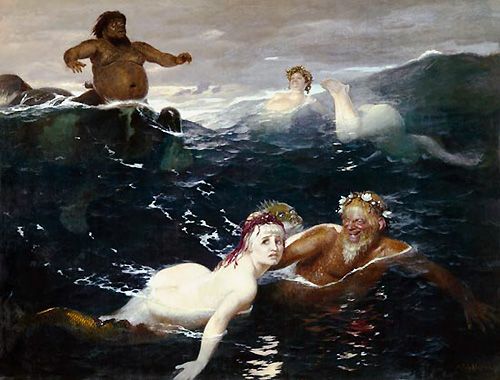
Arnold B???cklin, "Im Spiel der Wellen"
Source: Sterling CD (my rip!)
Format: mp3, 320k/s (CBR), DDD Stereo
File Size: 134 MB (incl. cover)
Download Link (re-up) – https://mega.co.nz/#!mlIjABzJ!IE0_RhfR17SlYJk10KocCBJxtf54Mm35jcbCXdp OAF8
Enjoy! Don’t share! Buy the original! 🙂
Great share!
You should save this claptrap to fertilize lawns. ;-(
"The life of Plymouth-born English composer Stanley Bate was a deeply troubled yet prolifically productive one.
Michael Barlow’s article on this site recounts the details. Like Britten and Richard Arnell, Bate sent the war
years in the USA achieving performances and broadcasts but storing up a freight of neglect and resentment for their
return. That neglect was in the case of Bate and Arnell accentuated by the movement of establishment-
favoured fashion towards dissonance.
The passion-torn pages of the Third Symphony are a very grown-up testament to the tragedy and violence
of the Second World War. It’s a work I have known since the mid 1980s from a tape of Adrian Boult’s 12 July 1965
broadcast by the CBSO. It’s a shame that this was not coupled with the contemporaneous Havergal Brian Gothic
broadcast just issued by Testament on SBT2 1454. For Dutton Epoch Martin Yates allows the turbulence of this
work full power. It’s a potent piece which is racked with conflict. Its brothers in mood are the Walton First Symphony
(stunning echoes at the start of Bate’s third movement), the Arthur Benjamin Symphony, the Symphony by Hubert Clifford,
RVW symphonies 4 and 6. When the brass chorale rings out heroically in the first movement at 10:02 Bate and Yates
leave us in no doubt as to the enduring power of this writing and of what we have been missing these years. In the
second movement there is some searingly stratospheric music for the violins (4:13). It seems to carry the burden of
tragedy. That burden is lofted in gloriously etched rhythmic work from the brass at the start of the finale. We have
already had the Viola Concerto from Dutton Epoch wonderfully projected and shaped by Roger Chase. I do hope that
we will soon hear the Piano Concertos 2 and 3 and the Fourth Symphony. As things stand Dutton and a number of
other companies make one think that anything is possible.
Arnell is at long last – and deservedly – well represented on Dutton. On the present disc we have world premiere
recordings of Black Mountain and the Robert Flaherty – Impression. The first is a succinct murmuring
mood miniature – chilly, tonal and referring to the film-maker Robert Flaherty’s Vermont home in all its imposing
jagged-bleak wintry harshness. Then the Flaherty Impression sings out at much greater length, tender and caring,
poetic and yielding, but also riven with conflict at 6:00. It’s quite a romantic piece – effectively a personal tone-poem
blessed with a Copland-style nobility. Arnell must have admired Flaherty no end. The grand arc of this piece curves
down into a not untroubled quietude presided over by the valedictory harp.
Erik Chisholm’s impressive music is making a steady recovery revival aided by the well informed and dedicated
energy of his daughter. Her work and that of other Chisholm champions is reflected in the Chisholm website.
The Pictures from Dante (after Dor???) date from 1948. the piece is in two panels: (i) Inferno and (ii) Paradisio.
The Inferno broods and hums with the elemental murmuring force of a black storm barely held back and eventually
unleashed in all its spleen over the fragments of the Dies Irae. The sound-world recalls a sort of modernised
Francesca da Rimini crossed with the inky waters of Bax’s Northern Ballad No. 2 and Rachmaninov’s Isle of the Dead.
If only Bernard Herrmann had heard this score. He would surely have recorded it and probably coupled it with
Josef Holbrooke’s The Pit and the Pendulum. The second and longer panel is the Paradisio. This is temperate music,
with gleaming strings, chant-inflected woodwind, blessed with peace yet still having the spectral outline of the
Dies Irae moving in bleached colours in the background. The ominous presence fades and gradually the music walks
thorough realms of birdsong – shades of Messiaen, Griffes and RVW’s The Shepherds of the Delectable Mountains –
and beatific visions that rise in an arch of triumph."
Musicweb International
Music by Stanley Bate, Richard Arnell & Erik Chisholm
Played by the Royal Scottish National Orchestra
Conducted by Martin Yates
"This has to be one of the best Dutton releases of all time. Having been bowled over by Stanley Bate’s Viola
Concerto on an earlier Dutton release I eagerly awaited the possibility of them issuing his Symphony No 3,
which I had heard was his masterpiece – and here it is! Bate’s Symphony No 3 is a troubled, stormy, lyrical work
– very much of its time (1940). I think that the influence of Bate’s teacher Vaughan Williams is more assimilated
than in the wonderful Viola Concerto (actually a later work), but it has a great VW type second subject in the
first movement which once heard, stays in the mind long afterwards (like the big tune in the first movement
of Vaughan Williams’s later 6th Symphony). This is a searching and poetic score and I am not surprised that
it made a great impression when it was first performed in the 1950s. Oddly enough the opening of the last
movement reminded me momentarily of the contemporary Japanese composer Yoshimatsu. Sadly Bate suffered
critical rejection, especially it seems by the BBC, and he died prematurely in 1959. Now, I hope that Dutton
will go on to record Bates’ Fourth Symphony of 1955.
The CD is a must buy for all British music fans for the Bate alone but its companions on disc are also fine
scores. Richard Arnell’s ‘Prelude, Black Mountain’ is an epic score in under three minutes! Arnell was just as
undeservedly neglected as Bate and his symphonies 3-5 on Dutton were great discoveries for me.
Finally Scottish composer Erik Chisholm’s ‘Pictures from Dante’ (after Dore’s Illustrations to ‘The Divine Comedy’)
plunge us headlong into the nightmare world of Dante’s ‘Inferno’. The despairing and catastrophic opening of
the work is wonderfully intimidating (even more so than the opening of Khachaturian’s Second Symphony
‘The Bell’). As with the Bate work, great use is made of the orchestral piano. I had greatly enjoyed an earlier
Dutton release of Chisholm’s ‘Ossian’ Symphony No 2 but this is a greater work – I can’t stop playing the
opening, which is based on the Dore illustration of Dante and his spirit guide Virgil, peering into the depths
of Hell from a precarious ledge – fortunately I have a copy of the illustrations which adds to my enjoyment of
this piece. Although a much louder work Chisholm’s ‘Dante Pictures’ conveys much the same kind of relentlessly
dark eloquence as Miaskovsky’s tone poem ‘Silence’, but the Chisholm work offers the contrast of its very
moving second section ‘Paradiso’ – where a noble theme leads us into a most poetic movement – these are
great works and all credit to Dutton, The Royal Scottish National Orchestra and its fine conductor Martin Yates
as well as to Lewis Foreman for initiating the project and providing great accompanying notes."
Amazon Reviewer
Source: Dutton Epoch D (my rip!)
Format: mp3, 320k/s (CBR), DDD Stereo
File Size: 160 MB
Download Link (re-up) – https://mega.co.nz/#!u5ZC3ahS!ZjqM_T6qNMzLt55T0R9OvR7frfBOvS6e-vlloesv5sY
Enjoy! Don’t share! Buy the original! 🙂
Odeon: L???szl??? Lajtha (http://odeonmusic.blogspot.gr/search/label/L%C3%A1szl%C3%B3%20Lajtha)
No.304
Fernando Lopes Gra???a (1906-1994), or Lopes-Gra???a as he himself used to write, to preserve his
two family names, was born in Tomar, a small city northeast of Lisbon, in 1906 and died in Parede, a small
town west of Lisbon on the Atlantic Coast, in 1994. He was one of the most prolific Portuguese composers
of the twentieth century, with compositions encompassing a wide range of genres. The most relevant aspect
of his musical style is, however, his endeavour to use Portuguese folk-music as a medium to forge his persona
l style, very much like B???la Bart???k, although some of his works are very cosmopolitan in style and approach.
The four works included in this recording represent a wide range of Lopes-Gra???a’s creative spirit. One can
appreciate his very personal way of treating Portuguese folk-music in the Rustic Suite, his sombre approach
to music in his December Poem, the title of which is a reference to the dark atmosphere of this month of
the year, his penchant for aggressive and dissonant harmonic textures in the Festive March and, finally,
his concept for the development of larger musical structures in the only Symphony he composed.
Music Composed by Fernando Lopes-Graca
Played by the Royal Scottish National Orchestra
Conducted by ???lvaro Cassuto
"With his somewhat younger contemporary Joly Braga Santos, Fernando Lopes-Gra???a is undoubtedly
one of the most important Portuguese composers from the first half of the 20th century. His output is literally
enormous and ranges from short didactic piano pieces to substantial works in various genres. He also devoted
much time and scholarship to editing and arranging Portuguese folk music – a voice that is rarely absent
in his own music.
The Suite R???stica No.1 dates from 1950 and its six movements are arranged in a straight-forward way though
spiced with mild dissonance sometimes recalling Milhaud’s Suite Proven???ale. Four out of the six movements
are simple dance tunes deftly arranged and colourfully scored but the two slower movements (No.3 –
Andante and No.5 – Lento, non troppo) are somewhat more serious. Just listen to the almost Mahlerian
Andante. Incidentally, Lopes-Gra???a did indeed compose three Rustic Suites but for different instrumental forces.
Suite R???stica No.2 of 1965 is for string quartet (once available on Portugalsom SP 4036 reviewed here
several years ago) and Suite R???stica No.3 is for wind ensemble; I do not know whether it has been recorded
or not.
On the other hand there is not a single hint of folk music in Poema de Dezembre (“December Poem”). This
is a meaty tone poem in which a rather dark and at times troubled mood prevails. The “red thread” running
through the entire work is the oboe melody heard at the outset. It keeps reappearing in one guise or another
and providing the dreamy coda of this very beautiful piece that definitely deserves wider exposure.
Festival March is by comparison slightly less satisfying, possibly because one expects something brighter
and more festive than what one actually hears. Even so there are many felicitous touches of scoring in
this short piece – try the eerily dancing horns (at about 0.50 into the work) that may remind one of Stravinsky’s
Petrushka. There is actually more than one hint of Stravinsky’s music in this very piece and in other works of
Lopes-Gra???a. This short work may not be among Lopes-Gra???a’s greatest achievements but there are fine
things enough in it to make it worth more than the occasional hearing.
Sinfonia per orquesta is Lopes-Gra???a’s only symphony and one of his more substantial achievements. This is
a weighty, deeply serious and sincere piece of music-making. It is in three sizeable movements of which the
outer ones are by far the weightiest, the concluding Passacaglia particularly so. The very title of the first
movement Allegro rapsodico is rather deceptive in that it actually conceals a developed and tightly argued
sonata movement that builds to an imposing climax before reverting to the arresting gesture of the opening.
The second movement Intermezzo may be shorter but is certainly not as easy-going as one might think. Its
structure is more straightforward than that of the outer movements but the thematic material is rather angular
and animated so that one might regard this movement as the symphony’s Scherzo. As ???lvaro Cassuto rightly
states in his detailed and well informed insert notes, the third movement Passacaglia is the symphony’s
most complex movement. It is also the most difficult to bring out successfully. This is mainly because of
the abruptness and capricious character of the variations that do not unfold as seamlessly as in, say, the
final Passacaglia in Vaughan Williams’ Fifth Symphony. The variations, however, proceed towards an imposing
climax, probably the most impressive one in the entire work. This quickly dissipates and leads into the coda,
in fact yet another variation on a fragment of the Passacaglia’s theme. It consists of a mighty sound wave
receding into softly sustained chords. Lopes-Gra???a’s Symphony is unquestionably a big work and it
deserves to be fully appreciated. It’s also a rather complex piece and a convincing performance calls for
some considerable preparation and commitment. This it clearly gets in this strongly committed and well
prepared reading – a feather in the cap of both Cassuto and the RSNO.
???lvaro Cassuto’s association with the Royal Scottish National Orchestra has already yielded some rewarding
results with their Braga Santos disc – Naxos 8.572815 that I reviewed here some time ago. The release
under review clearly confirms that conductor and orchestra are obviously on the same wavelength. I hope
that this association will go on for there is still much worthwhile music by Portuguese composers to travel
outside Portugal. As far as Lopes-Gra???a’s music goes there are many works that cry out for brand new
recordings. I would welcome new recordings of Hist???ria Tr???gica-Mar???tima, Viagens na minha terra and the
imposing and deeply moving Requiem while not forgetting some of his concertos and miscellaneous
orchestral works.
In short this is a magnificent release on all counts. The performances and the recording are superb but –
more importantly – it allows for a good appraisal of some of this endearing composer’s finest works.
A bargain and no mistake."
Musicweb International http://i1084.photobucket.com/albums/j415/wimpel69/musicwebrec_zpsfb7fe450.gif
Source: Naxos CD (my rip!)
Format: mp3, 320k/s (CBR), DDD Stereo
File Size: 160 MB (incl. cover, booklet)
Download Link (re-up): https://mega.co.nz/#!BYoUmCCB!ODoDVg_fvzdlfQPZ6e9pEjzbyH1nXf7DXN4bUpC CYeU
Enjoy! Don’t share! Buy the original! 🙂
Erkki Melartin (1875-1937) was the most versatile of the Finnish Late Romantics. Although the main
part of his works leans to the Romantic tradition, he also expanded his musical style towards Impressionism
and even Expressionism.
Melartin’s output can be divided into two main realms: stylistically reformed and artistically ambitious serious
music and lighter, salon music-like utility music. Especially for the general public Melartin has become known
through his brief and lighter-style pieces. He created many charming, melodically original and skilfully
designed pieces: children’s music, solo songs, piano pieces and incidental music.
Because of the large number of piano and vocal music Melartin is usually considered as a lyricist, but himself
he regarded the symphony as the focus of his output. He wrote six symphonies (1902–1924), which show
among other things his receptiveness; the fifth is a Sinfonia brevis ending in a fugue and chorale, while the
sixth, harmonically more advanced than the other five, advances stepwise from a C minor first movement
with evocations of G. Mahler’s seventh symphony – to an E-flat major finale. The fourth symphony uses a
vocalise like that of Carl Nielsen’s Sinfonia Espansiva. Melartin composed his symphonies about simultaneously
with Sibelius, but managed to keep free from the impacts of Sibelius. Actually, his symphonic style is more
compared with Sibelius’ antithesis G. Mahler.
Music Composed by Erkki Melartin
Played by the Tampere Philharmonic Orchestra
With John Storgards (violin)
Conducted by Leif Segerstam
"Ondine has given us a marvelous series of the six symphonies by Erkki Melartin (1875-1937), a series anyone
with even a passing interest in late- or post-romantic symphonic music should check out immediately. Of course,
there are traces of Sibelius, but more in terms of overall mood than actual compositional techniques o
r thematic material in Melartin’s music, but there is also an individual voice, and quite clearly the presence
of a strong melodic gift. The violin concerto here is a good example; written in 1911-13 (and revised in 1930)
is wonderfully melodic, beautifully orchestrated and relatively well constructed (although the finale tends to
be a little episodic) – it is in any case a captivating, truly memorable work. The slow movement is perhaps the
finest, but the whole work really deserves to be heard.
The Impressions de Belgique is, well, it is rather clich???d, to be honest, and overall a little bit syrupy in its
desperate attempts to create vivid atmospheres. But even if it is a guilty pleasure (as Ketelbey would be a guilty
pleasure for those who enjoy his music), it is still a pleasure. It contains some marvelous melodic ideas, and it
is beautifully scored (the Scherzo perhaps in particular). The final movement, Hymne, is too banal for me, and
a let-down after its evocative opening, however. The Sleeping Beauty suite is not particularly consequential
although this too contains many fine things – the catchy Wedding March is apparently very popular in Finland.
The performances are excellent; Segerstam seems committed to make the music work as best it can, and leads
some generally light-footed, colorful but full-blooded performances. Storg???rds is an excellent soloist in the concerto
and the sound quality is superb. This is a rewarding release that deserves to be heard."
Amazon Reviewer
Source: Ondine CD (my rip!)
Format: mp3, 320k/s (CBR), DDD Stereo
File Size: 178 MB
Download Link (re-up) – https://mega.co.nz/#!pAx20ZIR!ePcVB14OJ5tr4KAzR88dFRM1UpMPcEzOQntsQGB gTLg
Enjoy! Don’t share! Buy the original! 🙂
Still checking the thread, ATM discovering composers in #80 U^^. Im slow, i know.
Sure. I got a lot of Lutoslawski. 😉
No.306
Another potpourri of Mexican orchestral works, this entry focussing on Manuel Ponce, the country’s
first significant "national composer". His Ferial (Divertimento Sinf???nico), Instantaneas Mexicanas and
Estampas Nocturnas are joined by Silvestre Revueltas’ short Toccata and Carlos Ch???vez’s Chapultepec
(Republican Overture).
Music Composed by Manuel Ponce, Silvestre Revueltas & Carlos Ch???vez
Played by the Royal Philharmonic Orchestra
Conducted by Enrique B???tiz
"Manuel Ponce was a Mexican pianist and composer whose style underwent a profound change in midlife;
his works are clearly divisible into two types. The earlier style was derived primarily from the brilliant salon
style of Moszkowski and Chaminade, and is represented by numerous light works for the piano and a huge
quantity of sentimental songs. After studying with Dukas, Ponce developed a style that combined French
Impressionism and neo-Classical contrapuntal techniques. Most of his guitar music and the majority of his
more serious and larger works were written in this style. In addition to the songs and early piano works, Ponce
composed a piano concerto, several large symphonic works for orchestra, the Concierto del sur for guitar and
orchestra, which was premiered by Segovia, some chamber music, two piano sonatas, and a large quantity
of guitar music.
Born in 1882, Ponce had no important teachers during his childhood in Mexico. In 1895 he was made
organist of Saint Diego, Aguascalientes, and in 1900 he went to Mexico City to study piano with Vicente
Ma???es. From 1901 until 1904 he supported himself as an organist, teacher and music critic back in Aguascalientes.
Ponce left for Europe in 1904, giving his first recital abroad in St. Louis on the way. He stayed in Berlin,
teaching and concertizing until his return to Mexico City in 1909 to succeed Castro as the piano instructor
at the Mexico City Conservatory. During this time, his compositions became fairly popular in Latin countries, and
his renown grew; he became conductor of the National Symphony Orchestra from 1917-1919. In 1925, Ponce
moved to Paris and edited a music periodical; it was during this period that he studied with Dukas and
reformulated his compositional style. He returned to Mexico in 1933, and remained there until his death.
Many of Ponce’s earlier works have faded into obscurity, but some of his songs, particularly Estrellita (1914),
became enormously popular, and are still occasionally performed. Although most of his guitar pieces have
become part of the standard repertory, his major works are seldom performed outside of Mexico."
All Music
Source: ASV CD (my rip!)
Format: mp3, 320k/s (CBR), DDD Stereo
File Size: 134 MB
Download Link (re-up) – https://mega.co.nz/#!4AQQCDgL!asbtSzPH1_zszHPL3t1CogELnbQXz0iw6CT0O-CbO1s
Enjoy! Don’t share! Buy the original! 🙂
The fact that his father was one of the finest composers in the entire history of music
and that Franz Liszt(!) was his grandfather must have put quite a lot of pressure on
Siegfried Wagner (1869-1930) – too much pressure, in fact. Although he composed
prolifically (operas, too!), he never really managed to break away from his father’s
style. The three tone poems recorded here: Sehnsucht (Longing), Scherzo "Und wenn die
Welt voll Teufel w???r" (And if the world were full of devils) and the large-scale Gl???ck
(Happiness) are a case in point. The lush, even opulent late romanticism is similar
to the music of Richard, as well as of his student Engelbert Humperdinck (who, in
turn, taught Siegfried). But it’s well-crafted none the less.
Music Composed by Siegfried Wagner
Played by the Philharmonisches Staatsorchester Hamburg
Conducted by Werner Andreas Albert
"Siegfried Wagner had the best musical pedigree that a composer could conceivably have:
the son of Richard Wagner and the grandson of Franz Liszt (through Liszt’s daughter Cosima). His ancestry
proved to be a decidedly mixed blessing, however, as the younger Wagner — despite working in a different
musical era — was never fully able to step outside of the long shadow cast by his father, even as he
engendered the jealousy of musical rivals.
The younger Wagner, in celebration of whom the "Siegfried Idyll" was written, was privately educated for
the first 14 years of his life; apart from anything taught him by his father, his earliest musical training came
from Franz Liszt and Ernst Hausburg. Following Richard Wagner’s death in 1883, he studied with Wagner
acolyte Engelbert Humperdinck in Frankfurt. Despite his interest in music and his early training, Siegfried Wagner
chose architecture as a field of study for two years, touring the world as far as India in the course of his
training and exposure to design. Finally, in 1892, he turned back to music, beginning four years of work at
Bayreuth, working under his mother and conductor Hans Richter with the intention that he would ultimately
become Bayreuth’s director. Wagner conducted part of the Ring cycle at the 1896 Bayreuth Festival, and
five years later he staged The Flying Dutchman, all in preparation for his taking charge of the festival,
which he did in 1906.
Despite his duties in the service of his father’s music, Wagner found time to compose, completing his first
published work, the opera Der Barenhauter (1898), which premiered in Munich the following year to great a
cclaim. Alas, this first success proved very difficult to match, and none of his subsequent operas remained
long in the repertory or received enthusiastic critical responses.
Between his father’s direct impact on his life and Siegfried’s subsequent study with Humperdinck, it would
be extraordinary if the younger Wagner’s music were devoid of any resemblance to that of his father. One
can perceive the elder Wagner’s influence manifesting in the scoring of lengthy orchestral passages of Der
Barenhauter, as well as parts of the vocal writing, although thematically this and his other stage works
were far removed from his father’s work — he preferred librettos that dealt with subjects derived from fairy
tales and the supernatural, and focused on the psychology of his characters.
Der Barenhauter, the only one of Wagner’s operas to have been recorded officially, most resembles Humperdinck’s
work in mood and texture. Scholars have also detected the influence of such contemporaries as Jean Sibelius
and Gustav Mahler in his music. Of his other works, Herzog Wildfang (1901) is notable for a libretto that
parodied the libretto of Die Meistersinger Von Nurnburg, and An allem ist Hutchen schuld (1914) achieved some
popularity in Germany.
Wagner’s work at Bayreuth received acclaim at various points during the 24 years that he directed the festival —
for his stagings as well as his designs — but he also endured resentment from rival musicians. Ultimately, his
genealogy proved something of an undoing to his own musical reputation. Following Siegfried Wagner’s death,
the family did its best to suppress performances of his music, casting its lot with the more popular and profitable
works of Richard Wagner, and it was only with lapsing of various copyrights, and the formation of the Siegfried
Wagner Society in 1972, that his music was made available again, first in concert editions and more
recently in full performances."
All Music
Source: CPO CD (my rip!)
Format: mp3, 320k/s (CBR), DDD Stereo
File Size: 125 MB
Download Link (re-up) – https://mega.co.nz/#!70gUmZaJ!PBVAp0OGg0qwh_wcADi3zx4FtfkQJPzfkdm9mQe lQ60
Enjoy! Don’t share! Buy the original! 🙂
William Russo, better known as Bill Russo (June 25, 1928 – January 11, 2003), was an American jazz musician.
He is considered one of the greatest jazz composers and arrangers. A former student of the jazz pianist Lennie Tristano,
Russo wrote ground-breaking orchestral scores for the Stan Kenton Orchestra in the 1950s, including 23 Degrees
N 82 Degrees W, Frank Speaking, and Portrait of a Count. One of the more famous works he wrote for the Kenton
Orchestra is Halls Of Brass, specially composed for the brass section, without woodwinds or percussion. The section
recording this piece, featured such jazz artists as Buddy Childers, Maynard Ferguson and Milt Bernhart, was much-
respected by symphony brass musicians. At the beginning of the 1960s Russo moved to England, where he founded
the London Jazz Orchestra. He was a contributor to the Third Stream movement that sought to close the gap
between jazz and classical music. He returned to his native city of Chicago in 1965, where he founded Columbia
College’s music department and became the director of its Center for New Music. The two compositions here,
entitled Street Music and Three Pieces for Blues Band and Symphony Orchestra, are examples of
how Russo combined both jazz and classical instruments. The album was a great success in its day, and it has
continued to be re-released several times since.
Also included is George Gershwin’s fanciful tone poem An American in Paris, which, of course,
needs no further introduction.
Music Composed by William Russo & George Gershwin
Played by the San Francisco Symphony Orchestra
With Corky Siegel (harmonica/piano( & the Siegel Schwall Band
Conducted by Seiji Ozawa
"It might seem odd to pair this suave Gershwin classic with the rough-hewn music of William Russo,
but the audio-tourism of An American in Paris is certainly a forerunner (along with Duke Ellington’s Harlem)
to Street Music. Russo’s work, subtitled “A Blues Concerto”, forms a sort of ethno-musical travelogue in
which the tourist, guided by Corky Siegel’s ubiquitous harmonica and piano, encounters disparate styles
ranging from Greek to Asian to Deep South blues, all against a symphonic (and initially Brahmsian)
backdrop. Actually, the briny timbre of Siegel’s solos often clashes rudely with that of the other
“street musicians”, which creates a compelling sonic drama.
In contrast to the dovetailing sections of Street Music, Three Pieces for Blues Band and Orchestra
are self-contained entities. Russo’s striking combination of blues band (harmonica, guitar, bass, and drums)
and symphonic ensemble vividly recreates the sound world of those 1970s action movies starring
Burt Reynolds and Charles Bronson. Seiji Ozawa pulls off both pieces brilliantly by getting the San
Francisco players to let loose and really get into the groove.
In this company it’s striking just how European Gershwin’s American in Paris sounds–the bluesy trumpet
solo is about the only passage certifiably made in the USA. But never mind; Ozawa plays this busy,
swinging music with great style and panache, reminding us once again just what an electrifying work
this must have been when new. DG’s remastered recordings sound newly minted and do an excellent
job of balancing the soloists (even the electric guitar and bass) in realistic perspective with the orchestra."
Classics Today (9/10)
Source: Deutsche Grammophon CD (my rip!)
Format: mp3, 320k/s (CBR), ADD Stereo
File Size: 157 MB
Download Link (re-up) – https://mega.co.nz/#!ZFwRBLCZ!VZY9mhu_gUpZjJLk6oUdp3YL2VtI2tutTloAOfD ujyw
Enjoy! Don’t share! Buy the original! 🙂
Lucien Cailliet FTW!
RACHMANINOV: Symphonic Dances (http://www.theclassicalshop.net/Details.aspx?CatalogueNumber=CV%205143)
Meanwhile, I’ve managed to re-upload several posts from page 4 of this thread, now fully functional again for the time being:
Alexander Moyzes was the son of Mikulaš Moyzes, an important figure in the development of Slovak national music in the
years leading up to 1918 and the establishment of Czechoslovakia. He was born in 1906 in north-west Slovakia and
learned at first with his father before entering in 1925 the Prague Conservatory, where he studied organ, conducting
and composition. He graduated in 1929, the occasion of his First Symphony, and went on to study in the master class
of Vitezslav Nov???k, from which he graduated in the following year with his Overture for Orchestra, Opus 10. It was
Novak too who directed his concentration on Slovak music, the source of his inspiration.
Moyzes has particular distinction as a symphonist, his Ninth Symphony having been completed in 1971. His suite for large
orchestra, Dances from Gemer, Opus 51, was written in 1956, the period of his Seventh Symphony. Its four
characteristic movements epitomise the national music of Slovakia in form and idiom. With Eugen Suchoň and J???n Cikker,
Moyzes is considered one of the three leading composers of his generation in Slovakia. He succeeded in creating a style
of composition that was thoroughly Slovak in inspiration, yet nevertheless took account of contemporary trends in
European music, a synthesis that he was to consolidate in his later years.
The suite Down the River V???h draws overt inspiration from the scenery of Slovakia, for which Moyzes had a
particular affection, and was started in 1935 for the Czechoslovak Radio Orchestra. He returned to the work after the
war, developing it into its present form. The suite opens with sources of the river, surrounded by the peaks of the Tatra
mountains, from which it flows. The water tumbles down over the rocks, meeting as a river in the valley, and flowing on
in a majestic hymn to the Morava and the Danube. The second movement finds the river passing through flowery meadows,
where a shepherd plays his pipe, the sound echoing into the dusk as the sun sets. The river grows wilder and there is
thunder and lightning, while river raftsmen negotiate the rapidly swirling waters through the gate of Slovakia, guarded
by the old castle of Strecno. In Romance Moyzes recalls olden times, trumpeters calling noble guests to feasting in the
castle, while the peasants suffered, protected only by outlaws who robbed the rich to help the poor. The suite ends
as the V???h grows in size, rushing on to meet the Danube in the summer sunshine, with snatches of folk song and
dance to be heard through its surging waters.
Music Composed by Alexander Moyzes
Played by the Slovak Radio Symphony Orchestra
Conducted by Ondrej Lenard
"A capable conductor whose name might otherwise have meant little in the West, Ondrej Len???rd has gained
currency through a series of recordings released on the Marco Polo and Naxos labels, including a number of CDs
devoted to the music of Johann Strauss II. He also led a recording of Havergal Brian’s massive Gothic Symphony,
allowing the public to hear the work for the first time. Eventually, he came to conduct abroad, winning particular
favor in Vienna and the Far East.
While still a student at the Academy of Fine Arts in Bratislava, Len???rd was engaged as chorus master for the
Bratislava Opera Chorus. For his graduation concert at the Academy, he appeared before the Slovak Philharmonic,
beginning a long association with that ensemble. In 1964, Len???rd was appointed official chorus master of the Slovak
National Theatre. Five years later, he was engaged as principal conductor of Bratislava’s Czechoslovak Radio Symphony.
With that orchestra, he toured and recorded extensively in a relationship that was to endure for decades. Successful
appearances in the Far East led to his appointment as standing guest conductor of Tokyo’s Japan Shinsei Symphony
Orchestra in 1978.
In 1984, another prestigious appointment placed Len???rd in the position of principal conductor of the Slovak National
Theatre in Bratislava; in the new millennium, he was made general manager of the opera company. During his many years
there, he has overseen the careers of such star-quality singers as tenor Peter Dvorsk???, bass Sergej Kopc???k, and
dramatic soprano Eva Urbanov???. Elsewhere, he forged a positive relationship with the Vienna Staatsoper, Naples’ Teatro
San Carlo, and the Houston Grand Opera. Guest appearances in many European centers, in Brazil, Canada, and other
parts of the United States, contributed to the conductor’s growing reputation for mastery of his resources in the opera
house and on the concert stage.
Given the title of principal conductor of the Slovak Philharmonic in 1991, Len???rd has led the orchestra in both subscription
concerts and in festival performances. Among the latter were acclaimed performances of Verdi’s Manzoni Requiem at
the 1993 Smetanova Litomyšl Festival. In 1995, Smetana’s Vltava was hailed as outstanding and, in 1999, Len???rd won
particular commendation for a performance of Honegger’s Jeanne d’Arc au b???cher."
Source: Marco Polo CD (my rip!)
Format: mp3, 320k/s (CBR), DDD Stereo
File Size: 153 MB (incl. liner notes)
Download Link (re-up) – https://mega.co.nz/#!sB5ghQDA!NH-w0Hzhx8IoqOCzdlkJkAtdHo4rfDzdduRyD2wKZr0
Enjoy! Don’t share! Buy the original! 🙂
———- Post added at 03:24 PM ———- Previous post was at 02:30 PM ———-
No.310
Anatol Konstantinovich Lyadov (the last name is often spelled "Liadov"), 1855-1914, was the son and grandson of
noted conductors who led musical ensembles at the Mariinsky Theater and the St. Petersburg Philharmonic,
respectively. The young Lyadov showed exceptional talent and was admitted to the Conservatory. While
admiring his native talent, his main teacher, Nikolai Rimsky-Korsakov, was forced to expel him for unexplained
absences. He was later permitted to take the graduation exams, and passed them easily. He became a noted
professor and ethnomusicologist (publishing over 120 folk songs). He married in 1884, a match that gave him
considerable wealth and a large estate at Polinovka.
His music is beautiful, exceptionally skilled and imaginative, with an impressionistic mood (though not the
Debussyian style that word usually denotes). He was said to be shy and diffident. Either because of exceptional
lack of confidence or laziness he was incapable of completing more than a few large-scale works. He wrote some
piano pieces and songs, a few choruses, and about a dozen small but evocative orchestral works, some of which
were fragments from his unfinished opera Zoryushka. His inability to finish a commission from Diaghilev to write
the score for a ballet, The Firebird, led, famously, to its being given to the young Igor Stravinsky and launching
that composer to international fame.
Music Composed by Anatoly Liadov
Played by the Krasnoyarsk Symphony Orchestra
Conducted by Ivan Shpiller
"Liadov specialised in brief and sometimes concentrated tone poems, in dances and in atmospheric genre
miniatures. These are good performances with a small measure of imperfect ensemble recorded in a very lively
and resonant hall. Contrast the struttingly grand Pushkin and Rubinstein polonaises with the touching and soulful
About Olden Times; the latter’s Slavic melancholy is worn on its sleeve. Strangely the melody reminded me of
John Foulds’ Gaelic Lullaby before it sets off in a typically lively way reminiscent of Borodin and Kalinnikov. Nenie
has a nervy and Tchaikovskian character. The ticking pulse of Musical Snuffbox is utterly charming so if you
already warm to The Nutcracker – and who doesn’t – this will instantly win you over. The blare and oppression
of Dance of the Amazons connotes something tougher. And further out along that branch we come to Fragment
from The Apocalypse – a work seemingly caught up in the same visionary Theosophical mysteries as Scriabin in
his Poem of Ecstasy. In this work ringing grandeur rides high in massive combers of sound. The Eight Russian
Folk Songs can be enjoyed in the same company as Balakirev’s folk-themed overtures. The disc ends with Liadov’s
most celebrated tone poems. Kikimora, the story of a tiny spiteful witch is most touching and is spun with gold
and silver in the great tradition of Kouchka nationalism. Its magic can be related to a later but much more
familiar work – the creepy exoticism of Stravinsky’s The Firebird. The same magic arches over The Enchanted
Lake in a sweetly sorrowing impressionistic shimmer. Lastly there’s another piece of gruff witchery in the shape
of the wicked hag Baba-Yaga. She was recalled in Bax’s book Farewell My Youth. Here she is keenly portrayed
in spitting Mussorgskian fury as she blunders through the Russian forests with monstrous mortar and pestle.
The brief notes are by Dr David Doughty and usefully hold the listener’s hand through these discoveries.
Interesting to see that this vivid recording was produced by the son of Kirill Kondrashin, Pyotr Kondrashin.
Anyone with a taste for Russian nationalism needs to hear the Liadov orchestral works. This disc is an apt
way of getting to know them in vividly recorded and dedicated performances."
Musicweb International
Source: Brilliant Records CD (my rip!)
Format: mp3, 320k/s (CBR), DDD Stereo
File Size: 163 MB
Download Link (re-up) – https://mega.co.nz/#!O9YBBQzR!VCrtHQadbVov7evtk283IjjtshpBs-n3DWchyr2SMOQ
Enjoy! Don’t share! Buy the original! 🙂
———- Post added at 04:05 PM ———- Previous post was at 03:24 PM ———-
No.311
Alfredo Casella (1883-1947) was an outstanding if uneven composer who led several of his
contemporaries — Respighi, Malipiero, Pizzetti, and others — in a struggle to modernize Italian
music. His interests as a composer and as an author of articles on music were highly cosmopolitan,
as may be gathered from his early enthusiasms for Debussy, the Russian nationalists, Strauss,
Bart???k, and Schoenberg. Yet Casella was also intensely inspired by Italian culture, both its
folkways and its Futurism movement. His early works, particularly his first two symphonies
(1905 and 1909), were extremely modernistic for their time; that is, they were influenced by
Richard Strauss (as is the symphonic poem Italia, featured here) and Gustav Mahler (Casella
even transcribed the latter’s Seventh Symphony for piano, four hands). But Casella eventually
settled into an energetic, spiky neo-Classicism owing much to Stravinsky and something to Ravel.
Music Composed by Alfredo Casella & Ottorino Respighi
Played by the Moldavian National Symphony Orchestra
Conducted by Silvano Frontalini
"La Boutique fantasque or The Magic Toy Shop is a ballet conceived by L???onide Massine
who wrote the choreography and the libretto Ottorino Respighi wrote the music based on
piano pieces by Gioachino Rossini. Its world premiere was at the Alhambra Theatre in London
on 5 June 1919, performed by Sergei Diaghilev’s Ballets Russes. Lydia Lopokova and Massine
played the roles of the can-can dancing dolls in the original performance with
Enrico Cecchetti as the shopkeeper. The story of the ballet has similarities to Die Puppenfee
("The Fairy Doll" of Josef Bayer), an old German ballet which had been performed by
Jose Mendez in Moscow (1897) and by Serge and Nicholas Legat in Saint Petersburg (1903)
in the early twentieth century. Others note the similarities to Hans Christian Andersen’s
The Steadfast Tin Soldier. Massine’s story centers around the love story between two can-can
dancer dolls in a toy shop. Its general theme is lightly satirical, incorporating elements of
comedy, national folk dance and mime as well as classical choreography, and its story
unfolds in three acts."
Wikipedia
Source: Arts CD (my rip!)
Format: mp3, 320k/s (CBR), DDD Stereo
File Size: 135 MB
Download Link (re-up) – https://mega.co.nz/#!lA5FlapT!Txn5-jpHLsFIHK-dyhHxiiEFJPdfMN5jOQk7dYHGnL4
Enjoy! Don’t share! Buy the original! 🙂
Witold Lutoslawski (1913-1994) was the leading progressive figure in Polish music of the second half of the
twentieth century. Born in Warsaw, he showed an exceptional musical talent at an early age, with his first compositions
dating from 1922. He studied piano, violin, and composition (with Witold Maliszewski, a pupil of Rimsky-Korsakov),
graduating from the Warsaw Conservatory in 1937. Two years, at the beginning of World War II, Poland was
occupied by the Nazi Germany; and Nazi repression included censorship on artistic expression. Lutoslawski
survived the difficult war years as well as the subsequent Stalinist period by writing for radio, film, and theatre.
In addition, he arranged folk-songs and composed music for children.
Considered too formalist, his concert music was rarely performed. His first substantial orchestral work, The
Symphonic Variations was premiered in 1939. It is a work firmly rooted in tonality with a folk-like theme that is
varied in a kaleidoscopic way. His first stylistic period culminated in the folk-influenced, three-movement
Concerto for Orchestra (1954).
With the cultural thaw which started in the late ’50s, his reputation began to grow, at home and abroad,
as did his compositional style, with twelve-tone techniques appearing in Funeral Music (1958). In this work,
Lutoslawski continually resolves ascending scales with semi-tone intervals that tend to anchor tonal
centers within keyless regions. In Jeux V???nitiens (1961), Lutoslawski took his first step into a "limited
aleatory music" — after hearing a performance of John Cage’s Concerto for Piano in 1960. Lutoslawski’s
elegant String Quartet (1964) utilizes four rhythmically independent strands simultaneously, yielding
wonderfully dense and elastic textures. In the Live pour orchestra (1968) the work’s four main sections
are connected by controlled aleatory passages. Most of his subsequent works were orchestral, fully
chromatic, orchestrated in a manner suggesting Debussy and Ravel, and consistently develop an
opposition between aleatory and metrical textures. Lutoslawski went on to compose nearly twenty
major orchestral works, including Symphony No. 3 (1982), for which he was awarded the prestigious
Grawemeyer Award, and his final Symphony No. 4 (1992), commissioned and premiered by the Los
Angeles Philharmonic.
He also composed works for distinguished soloists, such as Dietrich Fischer-Dieskau, (&Les espaces
du sommeil), Heinz and Ursula Holliger (Concerto for Oboe and Harp), Anne-Sophie Mutter, Chain II,
Mstislav Rostropovich (cello concerto), and Krystian Zimmerman (Piano Concerto). Lutoslawski’s
extensive experience conducting his own works helped him to refine his musical language, his later
works becoming more lyrical and harmonically transparent.
Music Composed by Witold Lutoslawski
Played by the Polish National Radio Symphony Orechestra
With the Camerata Silesia
Conducted by Antoni Wit
"This further installment in Naxos’ Lutoslawski series opens with the Three Postludes, works
that occupy a key position in the composer’s output since they define a move away from his
serially-influenced middle period works toward a more plainly-stated, direct personal style. Antoni
Wit secures a taut, powerful account, with the complex running passagework and dense orchestration
of No. 2 effectively reproduced by the clear, well-balanced recording from the Fitelberg Concert Hall,
Katowice. Lutoslawski’s own 1976 recording of No. 1, with the same orchestra, has been issued
on EMI’s Matrix label; Wit obviously takes this as his lead but gets a much finer recording
and also presents the trilogy in full.
Arguably the most intriguing works here are the Preludes & Fugue for 13 solo strings. The principals
of the PNRSO play these pieces with enough flair and spirited self-confidence to challenge if not
surpass the performances on either of the two recordings made by Lutoslawski himself. Both of
those feature the Polish Chamber Orchestra, though sonically the 1976 EMI account is vastly superior
to the Polski Nagrania remake. On balance, you’ll get the best of all worlds with Wit’s capable
performance on this Naxos disc. Of the remainder of this collection–mostly short fanfares written
for various notable occasions–only the three-minute-long Mini Overture written for the Philip Jones
Brass Ensemble in 1982 has been widely recorded. The Polish brass players are a sonorous,
well-blended team, but if you’re not overly keen on Eastern-European brass playing and prefer
something with more cut and thrust to it, there’s a particularly incisive alternative by the Stockholm
Chamber Brass on BIS. No doubt most listeners will want this recording for the Preludes & Fugue
rather than for this slight brass piece, and on that score, these performances–especially at the
Naxos price–simply can’t be ignored."
Classics Today (8/9)
"We must thank Naxos and Wit for their committed efforts in recording 20th century Polish music,
especially of their continuing series of Lutoslawski’s complete orchestral works. Lutoslawski is one of the
most innovative composers of the mid-late 20th century, and the recording here (as in other volumes)
brings together works from both Lutoslawski’s earlier, folk-inspired era (Concerto and Overture) and
the latter, semi-aleatoric era (Poems and Mi-Parti).
The Camerata Silesia demonstrate full confidence in the semi-aleatoric processes going on in the
‘Three Poems’, based on Michaux’s surrealist poetry. Lutoslawski’s new style was gradually taking
form, and so this work is rather experimental in nature, paving way for the coming vocal masterpieces
‘Paroles tissees’ and ‘Les Espaces du Sommeil’. His semi-aleatoric style is well suited to the hissing
and shouting required by the text in ‘Le Grand Combat’. This is great fun to listen to. The last poem
of the work, ‘Repos dans le malheur’, an ultra-condensed requiem in a sense, is hauntingly beautiful.
(There is a misprint on the CD. ‘Repos’ should be track 6, while ‘Combat’ should be track 5.)
‘Mi-Parti’ is one of my favourite Lutoslawski works. Although written in the seventies, its long, beautiful
catilenas predate the composer’s Symphony No. 4 and ‘Les Espaces du Sommeil’ in the coming
decade or so (they are recorded on vol. 1 and vol. 3 respectively). There are lush string sonorities,
with flute bird-calls above, and the piece gradually builds up to a climax, followed by a wistful coda
(played by strings) ascending into heaven. Indeed, ‘Mi-Parti’ would’ve served well as a short
symphony. Analyzing on a more academic aspect, Lutoslawski employs ‘vertical/harmonic serialism’
here (as opposed to Schoenbergian horizontal/melodic serialism’). Chords are built using all 12 notes
of the chromatic scale, yet Lutoslawski spaces the notes widely, so that the harmonies sound
amazingly consonant, even neo-romantic, especially by the use of major and minor thirds/sixths.
The two-part structure (as implied by the title) is a signature of Lutoslawski’s later works
(Symphonies Nos 2, 3, and 4).
‘Overture for Strings’ brings us back to the composer’s earlier neo-classical era. A harmless
little piece with quirky harmonies that make one smile."
Amazon Reviewer
Source: Naxos CDs (my rips!)
Format: mp3, 320k/s (CBR), DDD Stereo
File Sizes: 179 MB / 136 MB (incl. booklets)
Lutoslawski: Concerto for Orchestra, Mi-Parti, etc (re-up) – https://mega.co.nz/#!tZ4ijL7I!Of_2U1arrJ32n9DOCucH8XutEOgBCEZy0DrZXnE dUPo
Lutoslawski: Preludes and Fugue, Fanfares, etc (re-up) – https://mega.co.nz/#!1N4DmYyB!akDL1TeZsoZU228-9hLQhkTL1KIzncwcLhhlXoGBaZ4
Enjoy! Don’t share! Buy the originals! 🙂
One critic has described American composer Jeremy Beck as “an original voice celebrating music.
Without self-consciousness, without paralyzing abstraction, Beck reminds us that music is movement, physically
and emotionally.” A recent finalist in the Utah Arts Festival competition for the 2013 Chamber Music Commission
and awarded Second Prize in the Boston Chamber Orchestra’s 2011-2012 Commission Competition, Peabody Opera
included his Review in its 2011-2012 season. Review was one of three finalists in the 2010 National Opera
Association’s Chamber Opera Competition and was previously included in Opera America and Houston Grand
Opera’s 2009 New Works Sampler.
Beck’s Songs of Love and Remembrance was awarded Third Prize in the 2012 Ali???nor International Harpsichord
Composition Competition and his String Quartet No. 2 (“Fathers & Sons”) was a Finalist in the 2011 New England
String Quartet International Composition Competition. Beck’s work has recently been heard in chamber music
performances at the Dallas Festival of Modern Music and his String Quartet No. 5 has been recorded by the Da
Kappo Quartet for release in 2013.
Beck’s 2011 CD, IonSound Project (innova 797), distributed by Naxos, features chamber music performed by
the ensemble-in-residence at the University of Pittsburgh. In his review of this recording, critic Daniel Coombs
has said that Beck is “one of the multi-talented, gifted individuals making … positive contributions to the
American new music scene and deserves wider recognition[.] … His music is uplifting, buoyant [as well as] …
emotional and sensitive to both the performer and the listener.”
About Beck’s 2008 CD of chamber music, Never Final, Never Gone (innova 696), another critic stated
“Beck’s music is well worth hearing and Innova deserves thanks for putting another relevant voice in front
of the public eye.”
Beck’s first two innova CD’s were included by Gramophone in its June 2006 Reviews: The best new recordings
from North America. pause and feel and hark (innova 650), released in 2006, features some of his chamber
music, including Black Water for soprano and piano. A monodrama based on the novel by Joyce Carol Oates,
reviewers have found Black Water “enthralling … stunning in its intensity” while Oates herself has written of
her “admiration for [this] beautiful and haunting composition.” Co-Opera recently presented the Australian
premiere of Black Water at the 2012 Adelaide Fringe Festival before taking it on tour to Sydney, Melbourne,
and elsewhere in Australia.
Reviews of Beck’s Wave (innova 612) — a Slovak Radio Symphony Orchestra CD devoted to his music and
released in 2004 — describe his Sinfonietta for string orchestra as “harmonically inventive, thoroughly engaging …
sinewy and gorgeous” and Death of a Little Girl with Doves for soprano and orchestra as displaying “imperious
melodic confidence [and] fluent emotional command.” At its world premiere, this operatic soliloquy based on
the life of sculptor Camille Claudel was appraised as flowing “seamlessly through the use of a dazzling variety
of instrumental and vocal color … a fresh, exciting piece by a major talent.”
Music Composed by Jeremy Beck
Played by the Slovak Radio Symphony Orchestra
With Rayanne Dupuis (soprano)
Conducted by Kirk Trevor
"Here we have a cross-section of Jeremy Beck’s music. Whether it is representative we can only take on trust
as his music has, until now, made little progress beyond New York, Yale, Chicago and Minneapolis.
Beck is certainly communicative; no ivory tower intellectual. Equally there is resilience and fibre in his writing.
His music is taut and engaging and is helped here by better than merely worthy advocacy from a Guildhall-trained
conductor and a Slovak orchestra. Everyone invested a full three days in setting down these recordings and
the refreshing results are patent.
The satirical State of the Union was written in Connecticut in reaction to George H. W. Bush’s State of the
Union speech projecting the image of a USA confident and at peace with itself? Beck saw it differently. His seething
Bernstein-inflected music reflects disillusion, angst, violence and superficial values. It falls into three sections
played attacca: March of the Politicians, Lullaby (for an Urban Child), Revels.
The four movement Sinfonietta reaches for a more profound region. It will be highly accessible to anyone who
enjoys the string music of Vaughan Williams or Tippett. Beck’s tumultuously gorgeous scoring has its own ‘signature’
lacking both the psychological acid one finds in William Schuman and the tart alkaline rasp of Rawsthorne to
mention only two major twentieth century contributors to the genre.
Regrettably the song-cycle Death of a Little Girl with Doves starts with hardly any pause after the quiet farewell
of the Sinfonietta’s moderato finale. The crashing of gears is soon forgotten. The text sequence was written
by the composer. It tells a heart-rending story of Camille Claudel (1863-1943) the sister of Paul Claudel, the poet,
writer and diplomat. Camille was a talented young sculptress, studio assistant to Auguste Rodin, ultimately his
lover. Their separation may well have precipitated her mental collapse and then her thirty year confinement in
an asylum. The storyline and the words put into the mouth of Claudel are fictionalised but carry a potent emotional
charge. The success of the recording owes a great deal to the clarity of diction, sheer musicality and acting
ability of the soprano Rayanne Dupuis. The words are set out in the insert but Dupuis is in any event easy to
understand. There is a full orchestra and the music is rife with incident both touching and dramatic. Dupuis has
to tackle a wide range of expression and style: full operatic temperament, parlando, ardent sentiment, speech
(including a cello accompanied reading of the mother’s letter to her daughter in the asylum), and word sound-play.
Comparison can be made with Britten but in his 1930s phase (at tr. 8 [9.35] – the masterly Our Hunting Fathers),
Barber (Knoxville, The Lovers), Rorem and maybe a touch of Roy Harris (Canticle of the Sun and Give Me the
Splendid Silent Sun). Other figures suggested include Sondheim in his more operatic mode, Copland’s The Tender
Land and Oskar Morawetz’s From the Diary of Anne Frank. This is a deeply attractive and touching piece of
writing which I recommend urgently for its imperious melodic confidence, fluent emotional command and
yielding tenderness.
A lovely disc made fully compelling by the song-cycle and one that is likely to leave most listeners keen to
hear more from Jeremy Beck. Let’s now have Death of a Little Girl with Doves in the 2005 Proms please.
Imaginative sopranos with good diction and adventurous and capable music directors should be seeking
out this disc. Do not delay."
Musicweb International
Source: Innova CD (my rip!)
Format: mp3, 320k/s (CBR), DDD Stereo
File Size: 122 MB (incl. cover)
Download Link (re-up) – https://mega.co.nz/#!hFpWzQYI!XlZHLB5SvrMTtzB6SkpCwUfW93hUL_KJahKQ_Hk VNPo
Enjoy! Don’t share! Buy the original! 🙂
Englishman Joseph Holbrooke was an industrious, working class composer whose ambitious and
extensive oeuvre betrays his equally considerable obscurity. The son of an English music hall musician
and teacher, Holbrooke sometimes used the name "Josef" to distinguish himself from his father, also named
"Joseph." Gaining his diploma from the Royal Academy of Music in 1896, Holbrooke made his public debut
as concert pianist that year; at RAM he had also met his lifelong friend and supporter, Granville Bantock.
By 1897, Holbrooke was working as a teacher and musical director based out of the London suburb of
Haringey, leading small groups in touring music shows. It was a peripatetic existence, but things
changed dramatically for Holbrooke in the year 1900 when three of his orchestral pieces were heard;
August Manns led the symphonic poem The Raven at Crystal Palace, Bantock premiered Holbrooke’s
The Skeleton in Armour with the New Brighton Orchestra and Henry Wood presented his Symphonic
Variations on "Three Blind Mice" at the Proms. By the end of 1900, Holbrooke was regarded as one
of the top young composers in England.
In 1908, Thomas Beecham premiered Holbrooke’s Apollo and the Seaman — sometimes referred to
as the Apollo Symphony — with a multimedia element in the form of magic lantern slides shown in
the darkened concert hall that provided a visual narrative to go along with the piece; these got
out of sync with the music and handed Holbrooke his first failure. However, the funeral march from
Apollo was a favorite of Captain Robert Scott and was much played at memorials held for Scott
after he perished on an ill-fated Antarctic expedition in 1912. Apollo also attracted the attention
of Lord Howard de Walden, who, with Holbrooke, embarked on a cycle of music dramas based on
Welsh folklore — The Children of Don, Dylan, and Bronwen — known under the umbrella
title of The Cauldron of Annwn. These ambitious works occupied both Holbrooke and de Walden from
1908 and 1920, and the collaboration also resulted in a number of smaller pieces based on Cyrmic
themes. De Walden remained Holbrooke’s benefactor until his own death in 1946, funding concerts
Holbrooke led, frequently devoted to young British composers, supporting recordings of Holbrooke’s
works, publications, and the like.
While Holbrooke’s Piano Concerto No. 1 (1907) — which had been premiered by Harold Bauer —
and his light music helped keep Holbrooke in the public mind, interest in Holbrooke began to decline
sharply after the end of World War I. This was in spite of the fact that Holbrooke enthusiastically
adopted the rhythms of jazz into his music, writing pop fox trots and other things of the kind during
the 1920s. At this time, Holbrooke began to suffer from deafness, which did not affect his musical
creativity but did make more difficult for him the business of conducting and simply communicating
with the outside world. With de Walden’s death, Holbrooke simply drifted into obscurity, dying at
age 80 the same year as his contemporary Ralph Vaughan Williams. However, he left a comparable
output: in addition to works already mentioned, he composed eight symphonies, a second piano
concerto, additional symphonic poems, much chamber music, and no less than 35 pieces based
on the works of Edgar Allan Poe.
Music Composed by Joseph Holbrooke
Played by the Ukrainian National Symphony & Slovak Radio Symphony Orchestras
Conducted by Adrian Leaper & Andrew Penny
"Joseph Holbrooke was one of the great hopes of British music in the early years of the century; but
by the time of his death in 1958 his music was seldom performed. A recent CD of historical recordings
(Symposium, 4/93) gave a hint of what we might have been missing- but this new collection provides a
far better chance to judge the justice or otherwise of the composer’s neglect.
Holbrooke gained much inspiration from Edgar Allen Poe, whose writings inspired three of the works here.
Like Poe, Holbrooke enjoyed conflict and confrontation, and the prevailing tone of the music here is of
dark brooding. Holbrooke was uniformly praised for the mastery of his orchestration and the boldness of
his harmonies; but his penchant for huge forces and unusual orchestral instruments (including concertinas
and sarrusophones) meant he was not always taken seriously (as anyone who has read Beecham’s A Mingled
Chime will know). It was with The Raven in 1900 that Holbrooke first made his mark, and one cannot
but be impressed with what a young man of 21 did with the orchestra. Perhaps, though, it is the orchestral
prelude to his cantata The Bells that most grabs the attention. From the Ravelian opening to the grand
climax in which massed bells ring out it is impressive stuff. Can we expect a Holbrooke revival? I somehow
doubt it; but Marco Polo earn the warmest gratitude for giving us the opportunity to judge for ourselves.
Purchasers of their Bantock and Brian recordings will not want to miss out on this rewarding collection."
Gramophone
Source: Marco Polo CDs (my rips!)
Format: mp34, 320k/s (CBR), DDD Stereo
File Sizes: 111 / 160 MB (incl. covers & booklets)
Holbrooke: The Birds of Rhiannon, etc (re-up) – https://mega.co.nz/#!UpswxQKL!MnySEVB5_3u7CiKJES3X_j5PlqxmpE2H2g-Zp2nNKFw
Holbrooke: Ulalume, etc (re-up) – https://mega.co.nz/#!Y9Em2YyQ!L63_kxPU5WfhKWJGXuMlKVeyU0okuA8lsLpXJzH O_k0
Enjoy! Don’t share! Buy the originals! 🙂
John Joubert was born in Cape Town in 1927. Aged 19 he won a scholarship to study at the Royal Academy of Music
in London and has lived and worked in England ever since. Joubert’s long composing career encompasses all genres from
symphonic, operatic and chamber works to the ever-popular choral miniatures, Torches and There is no rose. The two
Symphonies and three String Quartets are recent additions to a growing catalogue of recordings from across
his work list. Latest major commissions include An English Requiem for the 2010 Three Choirs Festival and Concerto for
Cello and Chamber Orchestra for Raphael Wallfisch as part of the 2012 Cultural Olympiad. Joubert will be featured
composer at the new music wells 73-13 festival in June 2013 to include a new mass setting and anthem for the choir
of Wells Cathedral.
William Alwyn is represented by two excerpts from his early operatic outing, The Fairy Fiddler (1924-26),
which was never completed- It is the work of a composer barely 20 and the Prelude is a lovingly attractive piece
– affluent in green countryside hues though the Irish brogue is not that assertive. It broods and hums to itself in mists
and mellow fruitfulness and dawn’s first stirrings. There’s a touch of bosky Bax or leafy Howells at work here.
The Derrybeg Fair is more rapturous showing an influence from Ravel mixed in with a Harty-like
whirling exultation.
Born to an Italian father and English mother, Carlo Martelli (*1935) was a viola player who entered film scoring
through his friendship with Gerard Schurmann. After his successful horror film scores of the 1960s (he worked as music
director for Hammer Films, and wrote the score to The Curse of the Mummy’s Tomb, 1964), his serious concert
scores were consistently rejected by The British Broadcasting Corporation because they were neither atonal nor
modernist. Discouraged, Martelli gave up composition under his own name in the 1970s and undertook some
ghost-writing and orchestration chores for others. However, by the 1980s he was encouraged to write again for
string quartets and found that his light music pieces were once again acceptable to the BBC.
Music by John Joubert, William Alwyn & Carlo Martelli
Played by the Royal Scottish National Symphony Orchestra
Conducted by Martin Yates
"On 11 and 12 January the Dutton Epoch team were in Glasgow with Martin Yates conducting the Royal Scottish
National Orchestra. They recorded the Symphony by Carlo Martelli and the Second Symphony by John Joubert with
orchestral music from William Alwyn’s early opera The Fairy Fiddler for release at the end of May (CDLX 7270).
After the amount of snow that had fallen in December it was very much touch and go whether this session would
take place, but in the event the weather warmed up while we were in Glasgow even if the Dutton van had driven
there through a snowy landscape. I had long wanted to find a way of recording Carlo Martelli’s gripping and dramatic
youthful Symphony (written when he was 19) which I had first encountered in the early 1960s. When it was first
played – at the Festival Hall – by the London Symphony Orchestra in October 1957 conducted by Norman del Mar it
was given high praise by the press, The Times’ critic describing it as ‘a work not only of exceptional promise but of
heartening achievement’. It soon received several broadcasts, one of which I was fortunate in chancing on. I was
delighted with it, and Martelli seemed a promising name to look out for. However like that other British composer who
seemed destined for big things in the late 1950s, Stanley Bate, Martelli then disappeared off the musical radar and
apart from a Serenade for Strings which I once heard played by the Welbeck String Orchestra I looked in vain.
Decades later I began to encounter the name again in light music programmes and it became apparent that Martelli’s
career had been a victim of that BBC change of stylistic direction in the early 1960s. So to be present while the
symphony was recorded by a top line orchestra was for me a personal ambition finally achieved, and it was especially
good to see the composer at the sessions as his youthful and energetic score unfolded. The orchestra seemed to
enjoy it too and I am confident that lovers of British music of that period will want to revisit this involving and very
approachable score. To quote that 1957 review again ‘the language is direct and diatonic, but gives the impression
of spontaneous originality’.
Dutton needed another symphonic revival from the mid-century to couple with it and another long-standing gap in
the recorded repertoire was chosen – John Joubert’s Second Symphony. This was first performed, also at the Festival
Hall, in 1971 when the composer had conducted, but has not been heard for some time. In a symphony responding
to the events of the Sharpeville massacre in 1960, John Joubert in his programme note tells how he was inspired by
the example of Alan Paton’s novel Cry the Beloved Country. He draws a fascinating parallel with Shostakovich’s
Eleventh Symphony noting ‘but there Shostakovich uses Russian political songs as symphonic material, I resolved
to make use of three African melodies to give my work a similar sense of urgency and immediacy of purpose’. This is
a tremendously vivid and dramatic score finely caught by the RSNO under the direction of Martin Yates. The third of
Joubert’s African themes is a Zulu lament whose final appearance on solo horn gives the music a tragic and elegiac
climax, though the work ends in violent conflict. This is a major score of the mid-twentieth century which will surely
find many admirers when this vivid recording is issued.
The two symphonies made for a rather short CD programme. To provide a contrast the orchestra also recorded
two delightful previously unrecorded short pieces by William Alwyn which were suggested by the Alwyn Trust.
As so often with such discoveries, we immediately feel it is a mystery why we have never heard such attractive
music before. These orchestral encores are the Prelude and ‘Derrybeg Fair’ music from William Alwyn’s very early
opera The Fairy Fiddler (1922 rev 1925, 1929). This is enchanting and colourful music which make a splendid
contrast to the striving of the two symphonies on this programme."
Lewis Foreman
Source: Dutton Epoch CD (my rip!)
Format: mp3, 320k/s (CBR), DDD Stereo
File Size: 162 MB
Download Link (re-up) – https://mega.co.nz/#!ptkxRLYI!Qvj47hip46EVpWBNDby6mHdi0Zd_ncR-VxlnxGGz2Ic
Enjoy! Don’t share! Buy the original! 🙂
Sinfon???a a Granada comprises five movements or scenes.
I. ‘… landscapes with dream factories’ – At the root of the guitaristic rhythm of the brisk buler???as
of the orchestra, a voice relates how the diverse kaleidoscope of the city is encapsulated in its history, its
dawns, its late violets, its song, its colours, its light, its landscapes with fabrics of dreams that bring us in a state
of fascination to experience ‘love for Granada’.
II. ‘Going up to the Alhambra’ – As if in a dream ‘let us go up to the Palace’. The
tinkling guitar invites us ‘to listen to the water’s voice’. The harp sounds, the song sounds, the scene lights up.
Let us go up to kindle The light of the dawn.
III. ‘The Land and the Sea’ – The vivid rhythm of the buler???as resounds through the
countryside and on the sea of Granada. Country dwellers and mariners tell of their troubles and laments.
In a distant tavern an anguished voice and a guitar can be heard: "Time rolls on between what is lost
yet remains."
IV. Dance of Sacromonte – A couple of years ago I was spending the night in the
company of the great flamenco singer, Enrique Morente, and other friends in the narrow streets of Sacromonte. A
gypsy girl came out of a cave some distance from us. She was very graceful with long hair, and carrying a
guitar. The tapping of her shoes resonated loudly in my ears. Her silhouette, lit up by the moon, stood out
marvellously in the night. That image fascinated me. Although Sinfon???a a Granada was dedicated to the
Regional Government of Granada, the scene inspired me to write Dance of Sacromonte, which I dedicate also to
those dancers and singers, male and female, whose names will never be known but who contributed so much
to the world of flamenco and the musical life of Granada.
V. A Snow Painted Sky – This calm and serene song takes us to the quietness of
the Sierra Nevada. The snows bring us near the sky of Granada.
Lorenzo Palomo
Music Composed by Lorenzo Palomo
Played by the City of Granada Orchestra
With Mar???a Bayo (soprano), Jos??? Luis Estell???s (clarinet)
And Vicente Coves (guitar), Luis Garc???a Montero (narrator)
Conducted by Jean-Jacques Kantorow
"The genius of Spanish nationalism in the early twentieth century was that it seemed to mesh with modern
ideals, primarily French ones, rather than standing at an opposite pole. The impulses thus generated have
lasted for a century now, and they’re tweaked but not altered fundamentally in this pair of works by
contemporary Spanish composer Lorenzo Palomo. He has found success in the U.S. and the rest of
continental Europe, as well as in Spain, and from this pair of works it’s easy to see why. Especially
effective is the Sinfon???a a Granada for soprano, guitar, and orchestra (there is also a narrator),
composed in 2007 in response to a commission from the Regional Government of Granada specifying
that the work should help "to establish bonds of union and brotherhood between the people of the
different territories of our province." Whether an orchestral composition can do this is debatable;
Palomo appears to have met this requirement with texts by poet Lu???s Garc???a Montero (who is also the
narrator) describing scenes from around the region. The music itself uses the rich heritage of flamenco
guitar and other Andalusian materials in a way that will seem familiar to audiences yet lies quite a
distance removed from the great Spanish standards. Palomo atomizes the material and his ensemble,
using, for example, flamenco rhythms in the Dance of Sacromonte movement (track 9) in fully
recognizable guise but with the addition of irregularities and details that force the listener to hear
them in modern structural terms. The Cantos del alma (2002) are written for the combination of
soprano, clarinet, and orchestra, inspired by Schubert’s song "The Shepherd on the Rock"; the
orchestral textures are once again mostly sparse, with the focus remaining on the solo parts.
Soprano Mar???a Bayo (Austrian, not Spanish) has a voice of just the right size for this music; the
City of Granada Orchestra under the versatile Jean-Jacques Kantorow has the moves of this music
down cold; in general it’s hard to think of a way the performance could have been substantially
improved. In general, Palomo produces something consistently lively and interesting even while
working under rather strict constraints. Enjoyment for many listeners will be hampered by the
absence of printed texts; they appear on a Naxos website that proved inaccessible on
multiple attempts."
All Music
Source: Naxos CD (my rip!)
Format: mp3, 320k/s (CBR), DDD Stereo
File Size: 139 MB (incl. cover, booklet)
Download Link (re-up) – https://mega.co.nz/#!cFQyGK5L!LOwUlVDe8Rlt2Fpz1fPt1kJeiKgPwENyF_OAkp0 j6NM
Enjoy! Don’t share! Buy the original! 🙂
Nigel Westlake’s professional career as a clarinettist commenced in 1975 at the age of 17.
His music studies include contemporary music performance, composition, screen composition,
orchestration and conducting with leading practitioners in Australia and Europe.
Westlake’s film work includes the feature films Babe, Babe – Pig in the City, Children of the Revolution,
A Little Bit of Soul, The Nugget and the Imax films Antarctica, Imagine, The Edge and Solarmax.
His television credits include documentaries, telemovies, news themes and station idents. Several of his
compositions were incorporated in feature international T.V. broadcasts during the Sydney Olympics 2000.
He has received numerous awards for his compositions including the Gold Medal at the New York
International Radio Festival and several APRA and Screen Composer Guild awards for his film and
concert music. The feature film Babe won the Golden Globe award in 1996 for best feature
musical/comedy.
Music Composed by Nigel Westlake
Played by the Tasmanian Symphony Orchestra
With Timothy Kain (guitar)
Conducted by David Porcelijn
"Nigel Westlake is a clarinettist but even so not many composer-executants put themselves on the line whilst
wielding the bass clarinet as Westlake does in Invocations. This is a constantly changing, ever-colourful work,
long on prismic patterns amidst some angular Bergian moments. Westlake, being Westlake, there are so
back-beaty moments too in the second of the four movements, lightly bluesy as well – a bent glissando signals
the widening of the palette. So indeed does the rather coolly aloof solo violin line. The German Romantics’ motto
Frei aber Einsam might have been the creed for the slow movement with its expressive withdrawn quality.
And the finale wraps it all up with some rhythmically charged drama.
Antarctica – suite for guitar and orchestra is a slightly earlier work. It began as a film score (an IMAX presentation)
but this is a reworking and includes material not utilised in the film score. Rather than a Vaughan Williams-
inspired affair Westlake is precise in his aural and visual reference points. Short motifs, jagged and abrasive –
splendidly suggested by brief cymbal “cracks”- are added to the guitar’s more amiable patterns. The Wooden Ships,
the second movement, carries with it a gentle romance, full of rich lyricism though its B section bears a more
ominous and discordant charge. The Penguin Ballet functions as a kind of scherzo – graceful underwater but
surprisingly gruff and unsteady on land. The Ice Core is the finale. Westlake manages to conjure up ice floe and
ice cracks with brilliant precision – yet this kind of writing is never crass or obvious. He blends and fuses colours
with impressionist security and deploys sharp sounds as defiantly as any Vorticist.
Finally there is the (lower-case) out of the blue for string orchestra. This was written at a difficult time for the
composer following a car crash. It certainly does evoke blues in the central, slow section but the spareness of
writing is the thing that most strikes one. It’s also minimalist in its control of dynamics. Elsewhere though
there’s plenty of rhythmically propulsive animation and a sense that corners have been turned and all is
for the better.
The Australian Composer Series notches up another success here. Full marks to the resident band, the
Tasmanian Symphony Orchestra here under David Porcelijn, for being such convincing advocates for so
much good contemporary Australian writing."
Jonathan Woolf, Musicweb
Source: ABC Classics CD (my rip!)
Format: mp3, 320k/s (CBR), DDD Stereo
File Size: 122 MB
Download Link (re-up) – https://mega.co.nz/#!JIRgnQgY!NjzZ-UahYs-8p5mH0xD0I3jIIcknWDr9uYMPC56LOT4
Enjoy! Don’t share! Buy the original! 🙂
Another volume in Chandos’ series devoted to the orchestral works of Vincent d’Indy, nicknamed
‘The Samson of Music’ by Faur???, for his work as a composer, conductor, and teacher. His style was
essentially eclectic, strongly influenced by Beethoven and Wagner, into which he frequently
incorporated folk melodies.
Based on a folk tune from the Tourtous, the Symphonie sur un Chant montagnard fran???ais is one of
the composer’s best-loved works. The highly atmospheric work is scored for piano and orchestra;
however, far from engaging in conflict with the orchestra, the soloist here operates on equal terms.
The solo part is performed by the internationally acclaimed Louis Lortie.
The symphonic poem Saugefleurie tells the story of the tragic love between Saugefleurie, a lonely
yet charming little fairy, and the King’s son, based on a poem from the Contes de f???es by Robert de
Bonni???res, a friend of the composer’s. The Wagnerian influence is apparent throughout; however, in
terms of orchestration and sonority the work remains characteristically French.
Among the now forgotten works of the French poet, novelist, and dramatist Catulle Mend???s is the play
M???d???e, based on the Greek myth of Medea, who murdered her two sons in revenge for her
rejection by her lover Jason, the leader of the Argonauts. D’Indy wrote incidental music to the play
in 1898, and later preserved it in the form of an orchestral suite in five movements, recorded here.
Also on the theme of doomed love is d’Indy’s first opera, Fervaal, a work of Wagnerian scale and
proportions, and clearly displaying the influence of Parsifal in the complex network of leitmotifs. At
the same time, in its historical setting at the time of the Saracen invasion, and in its musical
evocation of local colour, it reflects the earlier Parisian Grand Op???ra of Meyerbeer and Hal???vy.
Music Composed by Vincent d’Indy
Played by the Iceland Symphony Orchestra
With Louis Lortie (piano)
Conducted by Rumon Gamba
"British-born conductor Rumon Gamba is Principal Conductor and Musical Director of
Norrlandsoperan and Chief Conductor to the Aalborg Symfoniorkester, having served
between 2002- 2010 as Chief Conductor and Music Director of the Iceland Symphony
Orchestra. He regularly conducts the BBC Orchestras and has appeared at the BBC Proms
on a number of occasions. He is an exclusive recording artist for Chandos.
A champion of new music, Rumon Gamba has given several high profile premieres. Following
his successful opera debut conducting Candide with the English National Opera he returned
in spring 2011 for the world premiere of Nico Muhly’s Two Boys. He also conducted the
Swedish premiere of Poul Ruders’ Dancer in the Dark and Mark-Anthony Turnage’s Blood on
the Floor, both with NorrlandsOperan, the Icelandic premiere of Mark-Anthony Turnage’s
Scherzoid, and the world premiere of Brett Dean’s Viola Concerto with the BBC Symphony
Orchestra.
Rumon Gamba has worked with orchestras such as the Orquesta Nacionales de Espana,
the London Philharmonic and Tokyo Symphony orchestras; forthcoming engagements include
his debut with WDR Rundfunkorchester, and returns to the Royal Philharmonic Orchestra,
Orquesta Sinfónica del Principado de Asturias, the Berner Symphonie-Orchester, Tivoli
and Helsingborg Symphony orchestras.
In North America Rumon Gamba has worked with the New York Philharmonic, Toronto and
Indianapolis Symphony orchestras, NAC Orchestra Ottawa and the Florida Orchestra.
He has worked with all the major Australian orchestras and conducted the New Zealand
Symphony Orchestra and the Hong Kong, Osaka and Nagoya Philharmonic orchestras."
Source: Chandos CD (my rip!)
Format: mp3, 320k/s (CBR), DDD Stereo
File Size: 173 MB (incl. cover, booklet)
Download Link (re-up) – https://mega.co.nz/#!PtxiESAA!Rmhn6GkyFWZZJ5O8guCSxUQOD_BtkJKbdmx-Puf3eZg
Enjoy! Don’t share! Buy the original! 🙂
An unbeatable combination!
Thank you, wimpel!
I very much enjoy your thread, some great classical music here (already bought some of those CDs).
Do you possibly have the Natursymphonie by Siegmund von Hausegger? I would very much enjoy that.
Cheers,
aca2
The son of a well-known lawyer and music critic, Siegmund von Hausegger (1872-1948) enjoyed a
long career in music as a conductor and made a very limited, but, at the time, seemingly notable
contribution as a composer. He was initially trained in music by his father Friedrich von Hausegger
(1837-1899) who, despite being a lawyer by profession, wrote and advocated extensively on music
(and authored a university textbook on music education near the end of his life). Friedrich, who was
also a very early devotee of Wagner’s work and theories, established an environment that encouraged
musical creativity almost above all else, and reportedly even brought in professional soloists,
and an orchestra and choir to perform a student work of his son’s that proved too difficult for the
forces at his school. All of this positive reinforcement led to Hausegger’s composing of the one-act
opera Helfrid, from his own libretto, at the age of 18. His second opera, the three-act Zinnober,
adapted from the work of E.T.A. Hoffmann, was conducted at its 1898 premiere by Richard Strauss.
Hausegger held various conducting posts over the turn of the century and beyond, in Berlin, Hamburg,
and Munich. His output as a mature composer is limited to five orchestral works, of which the best known
today is the Naturesymphonie (Nature Sympony), scored for large orchestra, organ, and chorus,
which has been recorded as recently as 2006. Hausegger was, at one point early in the 20th century,
pegged by some critics in the German-speaking world as a potential successor to Wagner, Mahler, and
Strauss; but his boldly conceived, neo-Romantic style and large-scale conceptions fell out of favor
after the First World War, and he ended up instead becoming much more influential as a conductor in the
decades that followed.
Music Composed by Siegmund von Hausegger
Played by the West German Radio Symphony Orchestra
With the West German Radio Chorus
Conducted by Ari Rasilainen
"Bruckner buffs may recognize the name of Siegmund von Hausegger as the conductor who, in 1932,
championed Bruckner’s Ninth Symphony by presenting it for the first time in its original, unaltered form.
Apart from this, his name has largely been lost to history. Considering his importance as a conductor
in his time and the quality and quantity of his compositional output, this is truly a shame. Fortunately
for listeners, this CPO album provides a magnificent performance of one of his most grandiose works,
his "Nature Symphony." Composed in 1911, the symphony employs a massive orchestra that, like
Mahler, is used with razor-sharp precision. The liner notes of the album (which are annoyingly filled
with as much social commentary as historical information) provide detailed, step-by-step overviews
of the nature scenes being depicted and the Goethe writings that inspired them. Little known works
cannot be successfully recorded without top-notch performances. The WDR Radio Chorus and
Symphony Orchestra of Cologne, under the baton of Ari Rasilainen give listeners just such a
performance. Whether performing with full orchestral forces or a mere one or two instruments,
the technical precision and musical integrity of the musicians is abundantly clear, allowing
listeners to focus on the content of the music rather than the technical details of the performance."
All Music
Source: CPO CD
Format: mp3, 320k/s (CBR), DDD Stereo
File Size: 139 MB
Download Link (re-up) – https://mega.co.nz/#!G9QxUBrL!OKcc8H3iMNXTItuZ4EKlPxuPHeFM8BYrv5YLSMT zws0
Enjoy! Don’t share! Buy the original! 🙂
Abraham Lincoln (1809–1865), sixteenth President of the United States, has inspired as many works of literature,
fine art, and music as any statesman in history—his deeds and principles resonate in every age.
To prepare this collection celebrating the bicentennial of Lincoln’s birth, the Nashville Symphony, Leonard Slatkin,
and Naxos considered some ninety pieces of music ranging from large symphonies and requiems to chamber
works and songs. Of the eight selected works, some set Lincoln’s own immortal words (Copland: Lincoln Portrait,
Persichetti: A Lincoln Address) and some set words of poets inspired by Lincoln (Ives: Lincoln, the Great Commoner,
Harris: Abraham Lincoln Walks at Midnight). The purely instrumental selections draw their inspiration from
events in Lincoln’s life (Bacon: Ford’s Theatre), from Carl Sandburg’s famous biography of Lincoln
(Gould: Lincoln Legend), from emotions on contemplating Lincoln’s ideals (McKay: To a Liberator),
and from a folk-tune Lincoln used as a campaign song (Turok: Variations on an American Song: Aspects of
Lincoln and Liberty).
Music by Aaron Copland, Roy Harris, Morton Gould, Charles Ives,
Vincent Persichetti, George McKay, Ernst Bacon & Paul Turok
Anthony LaMarchina (cello)
Sharon Mabry (mezzo-soprano)
Barry Scott (narrator)
Mary Kathryn van Osdale (violin)
Nashville Symphony Orchestra and Chorus
Conducted by Leonard Slatkin
"The longest piece of music is Ernst Bacon’s Ford’s Theatre, a 30-minute suite of 12 short pieces originally
conceived as incidental music to a play by Paul Horgan called Death, Mr. President. Evidently the play was
not a success. Each of the pieces is suggested by an incident that took place during the week preceding
Lincoln’s assassination…One movement, entitled “The River Queen,” has some lovely moments; and the
music is pleasant… Morton Gould’s Lincoln Legend… is a 17-minute symphonic poem in several sections of
contrasting moods and dynamics. Through it are interwoven various American songs, most notably The
Old Grey Mare and The Battle Hymn of the Republic…Roy Harris’s…1953 setting of Vachel Lindsay’s Abraham
Lincoln Walks at Midnight… is actually one of the more interesting pieces on this program, with some
arresting moments…Barry Scott offers a fine reading of Lincoln’s words, and Leonard Slatkin, one of today’s
most sympathetic and effective advocates for the American symphonic school, leads a sensitive performance
[of Vincent Persichetti’s A Lincoln Address]…Aaron Copland’s A Lincoln Portrait… still moves me deeply—
the text, the music, the whole thing. Like the Gould work, this piece weaves American folk tunes into the
symphonic fabric. But it works because Copland does not twist them out of their natural settings; the
context in which he places them is in keeping with their characters. Again Barry Scott provides an
excellent rendition of the text, and Slatkin leads one of the most well-shaped performances of the work
I have ever heard. He and the Nashville Symphony are excellent throughout these recordings, but this is
most noticeable to me in the two works I know best. I am not privy to the machinations behind the scenes
concerning Slatkin, the Nashville Symphony, and Naxos, but while the other record companies ignore the
American symphonic repertoire, Naxos is bringing this music much-deserved attention. Like Schwarz and
the Seattle Symphony, Slatkin and Nashville are a winning combination."
Fanfare
Source: Naxos CDs (my rip!)
Format: mp3, 320k/s (CBR), DDD Stereo
File Size: 264 MB (incl. cover, booklet)
Download Link (re-up) – https://mega.co.nz/#!IQR2UAjD!ax5iq23YM-Zv54q3O4pVjwi3aZxZM_2tU2Te6XItpUw
Sung texts can be found at:
http://www.naxos.com/sharedfiles/PDF/8.559373-74_sungtext.pdf#
Enjoy! Don’t share! Buy the original! 🙂
I hope that you continue to offer us again rare albums…we must to do justice to all composers!
Thank you sincerely again.
No.321
This third volume of Marco Polo’s acclaimed edition of Igor Markevitch’s Complete Orchestral Music
presents two of his most intriguing works: R???bus, an enigmatic ballet commissioned by L???onid Massine
but never performed as such, and Hymnes, one of Markevitch’s most experimental compositions
(the ‘hymns’ are wordless and completely secular) to which, shortly before his death, he appended
the Hymne ??? la Mort.
Music Composed by Igor Markevitch
Played by the Arnhem Philharmonic Orchestra
Conducted by Christopher Lyndon-Gee
"Rebus is a masterwork of the 20th century, its neglect indicative of the public’s lack of
knowledge of the composer, Igor Markevitch. It had been commissioned by the famous
choreographer, Leonid Massine, but it was never performed as such, its premiere given in
1931 as a concert work. The name is derived from a once popular word-game, its five
movements explained in the disc’s enclosed programme notes together with the meaning
and the relevance of the named movements. It has Prokofiev as its precursor, with a
smattering of Poulenc, and a nodding acquaintance with Auric. Insistent rhythms drive
the music forward, the colours unusual, and at times extremely difficult for an orchestra to
put together. Yet it’s neglect is as much due to the composer who suffered a severe and
never understood illness, and on his recovery in the late 1940’s he moved to a life as a
touring conductor and renounced the success that his works had enjoyed. He did however
change the fourth part of Hymnes shortly before his death in 1983 so as to incorporate
a previously composed Hymne a la Mort. It was a rather bizarre experiment in wordless
Hymns, and whether it works in that respect is questionable, though as a piece of music
it is easy to like, the Hymne a la Mort a quite disturbing score. I have heard Rebus in a live
concert by a famous name orchestra since this 1966 recording and it was just as much
of a struggle as the Arnhem orchestra find. Hymnes is a little easier and they make out
a very good case for further listening. Reliable sound quality."
David’s Review Corner
Source: Marco Polo CD (now on Naxos) (my rip!)
Format: mp3, 320k/s (CBR), DDD Stereo
File Size: 132 MB (incl. cover, booklet)
Download Link (re-up) – https://mega.co.nz/#!lYQREQbZ!KQACV0wXapYWWWZMxp7g2naORAtwqNfpHXCB0o8 uq14
Enjoy! Don’t share! Buy the original! 🙂
It pains me to think that most people have never heard this music beyond it’s opening. The rest of the composition evokes imagery of such mystery and power that it surpasses even the best film scores of today. This is, without a doubt my most favorite classical piece of all time.
Pierre-Octave Ferroud was born in 1900 in Lyons and was killed in a car accident in Hungary
in August 1936. In this short period of time he established himself as a major figure in French music.
As a critic he contributed regularly to Paris Soir and from time to time to other publications, providing
himself in this way with a means of subsistence. He gained in Paris and in many travels throughout
Europe a number of international contacts, and through the foundation of his chamber music ensemble,
Triton, was able to introduce to French audiences contemporary music from abroad. He was
also successful as a composer, with performances of his works by distinguished musicians and
under well-known conductors. These works, contributions to almost every form of music, reflect
the French aesthetic of the inter-war period in a thoroughly personal musical idiom, making some
use of both imaginative caricatures and strict principles of construction. Pulsating rhythms and
harmonic sharpness, keeping melodic tonality in a tonal centre, characterize most of his works.
In his compositions Ferroud returned again and again to the orchestra and his nuanced techniques
of instrumentation won critical praise, even from sceptics. His early works, for example the Sarabande
and Andante cordial, show a clear but conscious debt to French tradition and especially to
Ravel, among others. From 1923 Ferroud lived in Paris and the first compositions of this period,
Au Parc Monceau, Types and Foules, delight in descriptive writing. In the mid-1920s he
shifted his aesthetic position towards classicisme, initially in his critical writing and subsequently in
his compositions. His musical idiom became more linear, transparent and at the same time formally
complex, as in the Violin Sonata of 1929. In instrumental writing he now finds no place for
particular illustrative detail. Although in the S???r???nade he wanted certain associations to be
made through the titles of the movements, this is far removed from the caricatures and genre
pictures of the earlier years. The Symphony in A takes up completely the broadened
development towards musique pure and was the turning-point from which Ferroud’s musical
idiom appeared more easily comprehensible.
Music Composed by Pierre-Octave Ferroud
Played by the W???rttembergische Philharmonie Reutlingen
Conducted by Patrick Davin
"Pierre-Octave Ferroud was a short-lived French composer who died in a car accident in Hungary.
A Lyonnais he wrote as a music critic for Le Soir and with his ensemble Triton he introduced
much contemporary music to international audiences. A number of his works were premiered
by Pierre Monteux. His music stylistically lies between the French romantics like Ropartz and
Tournemire and the extra-sec neo-classicists.
The 24 second Waltonian Sonnerie is a tartly clashing fanfare written for a French Radio
production of Victor Hugo’s Cromwell. It was Ferroud’s last work.
The Symphony in A Major is three movement work spanning 25 minutes It has much of
Honegger’s bustle and bubbling energy with some Prokofiev and other Russian influences which
he perhaps picked up from Tournemire’s Moscow symphony. There is repose too with chirping
birdsong. Some of this is Stravinskian but not dry. It also has some Copland-like brightness.
The andante is sometimes funereal, sometimes bucolically Stravinskian. There are occasional
wild whoops from the brass; altogether sweepingly unpredictable. It sometimes sounds like
Roy Harris in his ‘Ruralia America’ mode, perhaps imbibed from Boulanger. The finale
Allegro con brio is brilliant suffused with flashing and thrusting energy. It receives an
urgent spur from the conductor.
The Sarabande is music-box like with a gentleness drawing on the Forlane dance form
and itself modelled on Ravel’s Le Tombeau de Couperin. This work was the vehicle for
Ferroud coming to the attention of the French musical public. It was written first for piano duet.
The Eventail march (recorded previously by Chandos amongst others) is part of a collaborative
work. It is half jolly – half stern, with flashes of Prokofiev in his best but still slightly annoying
absurdist mode as in the opera The Love Of Three Oranges.
The Dreamy three movement serenade opens with a Ravelian Berceuse. There is an icy
edge to the melodic element. Then follows a romantic grand Pavane with much clock-ticking
and bell-tolling sound images. Finally there is a most unspiritual Spiritual. It is skittishly playful
with jazz age moments. This is serious light music or light serious music. In any event it
closes rather inconsequentially.
The Chirurgie Suite is based on music written for a play by Chekhov. It opens in a satisfying
mystery like something from the necromancer’s cave. There is a hint of Mussorgsky and the
exotic east (so beloved of the French – viz Roussel). This resolves into a careworn march
with wrong-note harmony and clashing bell-notes.
There are quite a few resemblances to Louis Aubert’s style. Aubert’s toweringly impressive
(and not to be missed) sea sketch Le Tombeau de Chateaubriand is on Marco Polo 8.223531.
(We need more Aubert please).
The final Andante Cordial is ethereal and Ravelian evoking summers in the long grass and an
unchained playfulness. Cordial – yes – heart-reviving music; simple but not simple-minded.
The notes are full and informative as befits an issue of almost totally unknown music. They
are in English, German and French The writer is Ruth Melkis-Behler.
A recommended issue. Once again Marco Polo push out the bounds of French music. The
cover is attractively adorned with Camille Pissaro’s The Avenue de Op???ra under Morning Snow."
Musicweb International
Source: Marco Polo CD (my rip!)
Format: mp3, 320k/s (CBR), DDD Stereo
File Size: 129 MB (incl. cover, booklet)
Download Link (re-up) – https://mega.co.nz/#!dMRkRQBB!WYSwWWH3x35CuPoXHIVtkxPxzGs530paL7KQeFt 4fZw
Enjoy! Don’t share! Buy the original! 🙂
John Fernstr???m (6 December 1897–19 October 1961) was a Swedish composer. Fernstr???m was born in Ichang,
China, where he also spent most part of the first ten years of his life at the mission his father directed, except for a
couple of years in Sweden. He resided permanently in the Swedish province of Sk???ne from 1907 and started to
study the violin at the conservatory in Malm???.
The Sixth Symphony is a big structure lasting more than 47 minutes. It is in four movements. The first is
reflective of Nielsen’s dynamic and stomping power – also to be heard in slightly different livery in Rosenberg in his
third and sixth symphonies. The second movement speaks peacefully from a sleepy hollow. The chipper third
movement is strong with upstart woodwind chirruping and hiccuping along and thunderous drum punctuation.
The finale seems to be a phantasm of an early Sibelian symphonic tempest with the blurt and rasp of the First
Symphony prominent and references back to the chipper third movement giving a degree of cohesion.
The Flute Concertino was described by Rangstr???m as ‘a butterfly at twilight with gold dust on its wings’.
So he wrote after a Stockholm performance in spring 1943. Fernstr???m and his brother-in-law (Gustaf Paulson)
were captivated by the poetry of the American Carl Sandburg. The Concertino is for flute, small orchestra and
women’s choir and the words set a poem ‘New Moon’ by Sandburg. This exalts the fanciful poetry of a twilight
buzzing with fireflies and moonlit Red Indian images, unsaddled ponies, night-rides and silver foxes gazing at
the moon. His intention was to capture the vague melancholy fantasy of the poem.
The Capricious Troubadour was written during autumn 1930 at about the same time as the Fourth Symphony
and the Symphonic Variations. Fernstr???m had just returned from a year’s study at Sondershausen in
Germany and planned to put the lessons learnt there into practice. Accordingly we hear in this four movement
(Preludium, cantabile, giocoso, finale) suite many Sibelian touches alongside gestures linking with Mahler and Weill.
The parallels with Sibelian theatrical suites are clear enough with a super-fine Bergian dusting but a robust galloping
open-air feeling in the Finale. The dominance goes to the same light and playful divertissement mood-set as Larsson
and certain works by Von Koch.
Music Composed by John Fernstr???m
Played by the Swedish Radio Symphony Orchestra
Conducted by Mikko Franck
"John Fernstr???m was one of the most prolific composers of his generation and his music often contained exotic elements.
He was somewhat overshadowed by the more radical music that dominated concert programmes in Sweden in
the 1950s, but in recent times Fernstr???m’s music has come to be appreciated more and more. In the broadly
conceived sixth symphony Fernstr???m makes imaginative use of a rich palette of orchestral colours. “A butterfly
at twilight with gold-dust on its wings” was how the composer Ture Rangstr???m described Fernstr???m’s Flute Concertino.
The work captures the mood of Carl Sandburg’s poem “New Moon”, which depicts a night ride in the Indian west.
The Capricious Troubadour is a humorous bagatelle in which Fernstr???m is in excellent spirits. This is No. 6 in the
series Musica Sveciae Modern Classics."
Source: Musica Sveciae CD (my rip!)
Format: mp3, 320k/s (CBR), DDD Stereo
File Size: 167 MB
Download Link (re-up) – https://mega.co.nz/#!YUY3QSYC!ZVTU9Xe0Nj2f4HhSKaRCclpLda1V8I_kkfZjKBd 2rTE
Enjoy! Don’t share! Buy the original! 🙂
Thanks, wimpel!
A companion piece to the upload of Lincoln memorials: Two works inspired by the
words and deeds of Marthin Luther King Jr. – Joseph Schwantner’s
New Morning to the World (for narrator and orchestra) and Nicolas Flagello’s
The Passion of Martin Luther King (with choir).
Music Composed by Joseph Schwantner & Nicolas Flagello
Played by The Oregon Symphony
With the Portland Symphonic Choir
And Raymond Bazemore (narrator)
Conducted by James DePreist
"Joseph Schwantner wrote New Morning for the World, subtitled "Daybreak of Freedom,"
in 1982 as a memorial to Martin Luther King, whom he called "a man of great dignity and
courage whom I had long admired." The American Telephone and Telegraph Company
commissioned the work for a tour of the Eastman Philharmonia. That orchestra gave New
Morning for the World its first performance on the 54th anniversary of King’s birth, January
15, 1983, at Washington D.C.’s John F. Kennedy Center for the Performing Arts (coincidentally,
King’s birthday was declared a national holiday in the United States later that same year).
David Effron conducted and Willie Stargell, the former first baseman of the Pittsburgh Pirates,
acted as narrator.
King’s own words, compiled from several of his speeches, provide the narrated text. The work
opens with explosive drums, shimmering percussion, and a forceful brass theme perhaps evoking
King’s violent death. The following theme for strings may represent his vision of peace.
Schwantner’s typically colorful orchestration is very much on display, and the sonorous declamation
of King’s words by the narrator is both dramatic and musical in its own right. Around ten minutes
into this 25-minute piece, a new motive in the strings appears; it is reminiscent of some of
Samuel Barber’s most lyrical ideas). The tempo increases behind the narrator’s repeated refrain
"How long? Not long…" as the work’s opening theme returns and builds to an energetic climax.
The Barber-like theme returns as the narrator moves into the words of the famous "I have a dream"
speech. In the quiet apotheosis, the orchestra hums quietly in the background, an effect Schwantner
calls the "celestial choir" and which he has used in other works."
Chris Morrison, Rovi
Source: Koch International CD (my rip!)
Format: mp3, 320k/s (CBR), DDD Stereo
File Size: 136 MB
Download Link (re-up) –https://mega.co.nz/#!MFo3zBoC!LkbK6m3bqQO4xwyeLD4YsFoAZONBXEK1pSSa0Fe SZno
Enjoy! Don’t share! Buy the original! 🙂
Joby Talbot’s ballet scores for Alice’s Adventures in Wonderland and Fool’s Paradise
were both created in collaboration with celebrated choreographer Christopher Wheeldon, who first
approached Talbot after hearing his piano trio The Dying Swan. This latter work was originally
commissioned by the British Film Institute in 2002 as a new score for the 1917 silent film of
the same name by Russian director Evgenii Bauer, itself illustrating the assorted trials of
a delicate ballerina in monochrome peril. The score’s yearning propulsion and exquisite
dissonances evidently suggested to Wheeldon a greater kinetic potential, and so
The Dying Swan for piano trio blossomed into Fool’s Paradise for string orchestra and a new life in
ballet, premiering with New York-based dance company Morphoses at Sadler’s Wells Theatre in
London in September 2007.
Alice’s Adventures in Wonderland, whose score is the first commissioned by The Royal Ballet for a
full-length narrative dance work in 20 years, won over not only London audiences but those in Canada
and the US, flocking to its premiere North American season with the National Ballet of Canada in June
of 2011. The production was sold out well in advance of its close and ended as the company’s
highest-grossing production of all time. Joby’s score was received with extraordinary relish by both
audiences and critics, who praised variously its energy, sophistication, wit, colour, danceability
and richness of expression.
Music Composed by Joby Talbot
Played by the Royal Philharmonic Orchestra
Conducted by Christopher Austin
"Two years after the Royal Ballet premiered its new ‘Alice’, the score by Joby Talbot is finally
released as an album. Anna Britten finds its capricious, often classically hued magic
well worth waiting for.
Providing the Royal Ballet with its first full-length narrative ballet score in almost 20 years must have
been an immense and intimidating task. But if ever a contemporary British composer was heaven-
sent to bring the zany world of Lewis Carroll’s children’s classic to life – and, crucially, give it
mainstream audience-friendly appeal – it was Joby Talbot. Having previous enjoyed a successful
collaboration with choreographer Christopher Wheeldon on a smaller dance project (‘Fool’s Paradise’,
also included here), this versatile purveyor of everything from madrigals to TV themes was declared
a must-have right from the 2011 production’s outset.
And he rose to the challenge. As heard on this long-awaited recording, Talbot’s capricious, colourful,
percussion-heavy orchestral score bubbles with incident, memorable themes, emotionally intelligent
motifs and witty instrument pairings (the Queen of Hearts is, literally, a highly strung solo violin)
and deftly conjures every plot point it should, whilst leaving just enough breathing space for
occasional introspection. Minimalistic inflections, such as those in the urgent, jangling ‘Setting
Up The Courtroom’, jostle with affectionate gestures to classical ballet – the sweetly melancholic
‘Alice Alone’, in which our heroine wanders lost and pining for her sisters, is particularly captivating,
as is the joyful final ‘Flower Garden’ pas de deux.
The Royal Philharmonic Orchestra under Christopher Austin’s baton delivers a flawless and
energetic performance, drawing out every ingenious flourish and limning each individual sound in
silver. If little dancers-in-waiting aren’t still twirling to this, years from now, we’ll eat our
‘In This Style 10/6’ hats."
Sinfini Music
Source: Signum Classics CD (my rip!)
Format: mp3, 320k/s (CBR), DDD Stereo
File Size: 157 MB (incl. booklet)
Download Link (re-up) – https://mega.co.nz/#!jlBxGLiI!N_cPVkh0ZMTfgM-lOg1wvHFAsN54iWaqpFDlmWBCgPY
Enjoy! Don’t share! Buy the original! 🙂
Another album of opulent late romantic symphonic poems by English composer Granville Bantock:
As might be expected of a man of exceptionally wide culture, boundless curiosity, and unlimited energy,
Bantock was a composer of works that were not only on the largest scale, but also heroic and exotic in theme.
The themes that inspired Bantock were often exotic: tales of the Orient, tales of Celtic and Classical mythology –
tales, in short, to compensate for life in prosaic, materialistic Britain.
The Pagan Symphony is a case in point. Here Bantock’s dream is of classical antiquity. According to
his daughter, Myrrha, he began work on the symphony in 1923. The published orchestral score, however,
firmly attaches the date 3 September 1927 (and the place, Paris) to the first bar, and 20 June 1928 to the last,
some 1,046 bars later. It may well be that the initial sketches were made at the earlier date, but it is clear that
the final details and orchestration belong to 1927/28. As with the Hebridean Symphony (1913) and
the Celtic Symphony (1940) (uploaded earlier), the Pagan Symphony is cast in one continuous
movement which falls into a number of sections which provide the element of contrast that is characteristic
of the separate movements of traditional symphonic form.
Bntock was much influenced by Liszt and Wagner and it is significant that his most successful early works
were those that depended either upon words or were illustrative of some poetic or dramatic programme.
Typical are the six tone poems he composed between 1900 and 1902, of which Fifine at the Fair is third
in order of composition. Almost all his orchestral works, whether or not they are actually labelled ‘tone poems’,
have a strong programmatic underlay: this was an age when composers revelled in the descriptive
powers of music and had no economic inhibitions about the size of orchestras.
Music Composed by Sir Granville Bantock
Played by the Royal Philharmonic Orchestra
Conducted by Vernon Handley
"British composer Sir Granville Bantock (1868-1946) was a conductor and educator as
well as a composer. A friend and admirer of Richard Strauss, his music was strongly influenced
by Liszt and Wagner. A master of orchestration, he wrote many symphonic works as well as
operas, chorus and music for solo voices and instruments. Often his music was based on
rather exotic subjects: tales of the Orient, tales of Celtic and Classical mythology.
This Hyperion CD offers two of his finest and best-known works. Pagan Symphony was
composed in 1927-8, an episodic one-movement work of about 36 minutes’ duration. Bantock
said of it, "the music may be described as a vision of the past, when the Greek god Dionysus
(Bacchus) was worshipped as the bestower of happiness and plenty, the lover of truth and beauty,
the victor over powers of evil. Immortal Aphrodite appears for a brief moment as the goddess of
Love, to remind the world of her supreme power and glorious beauty." The score includes a
gentle, soft opening, pastoral scenes, a scherzo, fanfare, and evocation of Aphrodite. It is all
quite grand, indeed. The other major work is Fifine at the Fair, a tone poem subtitled "In Defence
of Inconstancy." Sir Thomas Beecham championed this work, recording it, with some small
cuts, with the RPO in 1949 (available on EMI 63405). This is the third of Bantock’s six tone
poems, completed in 1911, based on Robert Browning’s 1872 poem, which muses on man’s
inconstancy when distracted by a thing of beauty he finds irresistible. In this the hero is on
the "sea of life," tempted by the exotic dancer, Fifine. Eventually he realizes this is just a
fleeting passion and returns to his forgiving wife, Elvire. The score is highly evocative, with
a brilliant carnival scene, and Fifine represented by a lengthy clarinet solo (played on the
Beecham recording by Jack Brymer, on the Handley by Roy Jowitt). Two of Bantock’s ventures
into Celtic mythology conclude this disc, two Heroic Ballads, completed in 1944, "Cuchullan’s
Lament" and "Kishmul’s Galley."
Performances on this Hyperion CD are magnificent, the sonic quality rich and full, with a
very wide dynamic range. You will not find French horns recorded more vividly that what is
heard on this CD (try the opening of "Kishmul’s Galley." If you enjoy this CD, you surely
also will wish to investigate two other CDs in the series: Hyperion CDA 66450 (Celtic Symphony,
The Witch of Atlas, The Sea Reivers, A Hebridean Symphony), and Hyperion CDA66810
(The Cyprian Goddess, Helene, Dante and Beatrice) all also featuring the RPO/Handley
and highly recommended."
Classical CD Review
Source: Hyperion CD (my rip!)
Format: mp3, 3230k/s (CBR), DDD Stereo
File Size: 186 MB
Download Link (re-up) – https://mega.co.nz/#!EIw1kQBT!N4HURQSpDQPMl1IsaJyvhF8_QLcKAMUqqhiofHD x-xM
Enjoy! Don’t share! Buy the original! 🙂
Thanks again, wimpel!
Do you think to re-post them in future?
Thanks for all.
If you’re missing a particular release, please point me directly to the posting in question.
Check out wimpel’s posts I liked. The ones I didn’t liked mean I didn’t/couldn’t download :’D
Andr???s Gaos (1874-1959) was a Galician composer and violinist. He studied violin, counterpoint
and composition at the Madrid Music Conservatory between 1885 and 1888. After that, he moved
first to Paris, then to Brussels to advance his studies with Eug???ne Ysaye (violin) and
Francois-Auguste Gevart (composition). Gaos later emigrated to Argentina where he taught
at the Montevideo Conservatory.
Most of Gaos music remained unknown during his lifetime. The Symphony No.2, recorded here,
was only premiered in 1974, sixteen years after the composer’s death. The works on this
album are all premiere recordings.
Music Composed by Andr???s Gaos
Played by the Orquesta Sinf???nica de Galicia
With Ondrej Lewit (violin)
Conducted by Victor Pablo P???rez
"Gaos was always immersed with greater or lesser dedication in his creative work, something that
has a priority interest within this summary: We would like to highlight that his work was marked
by a permanent lack of recognition of those surrounding him. In the family background of his descendants,
the lack of interest about his creations was an every day occurrence, with the logical exception of his
wives Am???rica Montenegro and Luisa Guillochon, and also of the last of his 8 children, Andr???s
Gaos Guillochon.
Though having a personality which was not too much extrovert and certainly reserved as regards as
his private life, Gaos seldom disguised his feelings and musical appreciations. In several opportunities
and to different interlocutors, somebody heard him say that his favourite composers were: Chopin,
Schumann and Grieg, whereas his preferred sonata for violin and piano was Cesar Franck’s. In the
lyric field, he always admitted that his favourite opera was “Fausto” by Gounod.Those who shared
with him his cheerful and witty character also remember that he was reluctant to make comments
or boast about his past successes; additionally we never heard him moan about the lack of interest
and indifference with which his works were received.
Let’s make clear for the specialists and those interested in him, that a great part of Gaos’s production
does not carry the Opus number, and when we do find it, the numbering is arbitrary and it neither
indicates a correlative order, nor the existence of works with previous numbering; as Gaos would declare
at family talks and, as it can be proved through a thorough analysis. However, in some occasions,
it can be observed that closed Opus numbers or correlative ones can coincide with works written
in the same period.
Without pretending to explain the inexplicable, let’s mention that the critics that accompanied his
recitals were always very complimentary, and this dazzle in front of the virtuous could have perhaps
darkened his acceptance as composer.
Even without participating in vanguard tendencies, Gaos is an authentic composer of his time and
above all a born melodist; though his phrases are not easily taken in at a first audition, not
because they are placed in an incomprehensible category, but for their deepness.
These Gaosian melodies run the risk of passing unnoticed if they are not listened again. Once a contact
has been made, there is bound to be a “connection” which conditions the listener to get back to
his music and become interested in other works of the same author.
Despite the indifference of his environment, which prevented Gaos from becoming a prolific composer,
his creations are extensive and cover different genres; and have the strange privilege of keeping
an astonishing level of inspiration which can be appreciated in all his productions.
What is really pitiful is that some valuable sheet music of his undeniable talent was lost for ever due
to the fact that throughout his life he never got one single musical “order”. If that had happened,
it would have encouraged his creative work and would have enriched our universal heritage.
Unlike painting, literature or other arts, the final result of the musical creation remains hidden and
intangible, waiting for the participation of the “performer” who would give life to it. In orchestral pieces
this particularity of the music acquires greater relevance like the painter when he mixes his palette,
the composer combines the sounds of different instruments to achieve the tones that are suitable
for its expression. It is then understood, that the subsequent verification on part of the author of
a happy or unwise choice is only possible with the irreplaceable orchestral intervention.
Gaos was not lucky as he did not belong to the “chosen” group of those who saw in life his orchestral
pieces be performed. At his death, in 1959, great part of his symphonic creations were in the dark.
Let’s remember that his Symphony No.2 “In the Mountains of Galicia” fully made its debut 15 years
after his death, and Gaos was only able to listen to his last movement “Country Dance” premiered in
1954. The worldwide premiere of his Symphony No. 1 took place in the Galician cities of Ourense
and Vigo in May 2005. Anyway, there are still several of his works which have not been performed
yet and which require the participation of an orchestra, among them are his Opera in one act and
7 scenes “Forbidden Love” (circa 1915), where the first scene “Dance” and the 6th one “Storm”
are exclusively orchestral. This contribution to the lyrical theatre made by the composer who was
born in La Coru???a is structured in the Argentine folklore on libretto and Spanish wording by Gaos
himself, who places the dramatic action in the province of Tucum???n (Argentina) in 1816.
We also would like to highlight other of Gaos’s lyrical pieces which belongs to the “Light Genre” where
singing parts alternate with dialogues and speeches and, like his only opera, they are filled with Creole
Folklore. This kind of creations which were very popular in Buenos Aires during the first half of the XX
century, formed a genre called “Lyrical Comedies”. For this genre, Gaos set to music the following titles:
“The last Violets”, “Facundo” and “X-Rays”.
Andres Gaos Website
Source: Arte Nova CD (my rip!)
Format: mp3, 320k/s (CBR), DDD Stereo
File Size: 148 MB
Download Link (re-up): https://mega.nz/#!SYM0VBSB!HZUCONoLuhza0yDPhlpvUWftlAbwyiZH-YADI_RVn_k
Enjoy! Don’t share! Buy the original! 🙂
Page 9, Julo G???mez (http://forums.ffshrine.org/f92/wimpel69s-could-film-music-classical-corner-work-121898/9.html#post2214798)
Page 9, Mozart Canargo Guarnieri (http://forums.ffshrine.org/f92/wimpel69s-could-film-music-classical-corner-work-121898/9.html#post2215478)
Page 9, Stevan Hristic (http://forums.ffshrine.org/f92/wimpel69s-could-film-music-classical-corner-work-121898/9.html#post2212682)
Page 10, Domenick Argento (http://forums.ffshrine.org/f92/wimpel69s-could-film-music-classical-corner-work-121898/10.html#post2219216)
Page 11, Anton Rubinstein (http://forums.ffshrine.org/f92/wimpel69s-could-film-music-classical-corner-work-121898/11.html#post2221665)
Page 13, Henri Rabaud (http://forums.ffshrine.org/f92/wimpel69s-could-film-music-classical-corner-work-121898/13.html#post2228086)
Page 14, David Stock (http://forums.ffshrine.org/f92/wimpel69s-could-film-music-classical-corner-work-121898/14.html#post2229356)
Page 14, Johan Svendsen (http://forums.ffshrine.org/f92/wimpel69s-could-film-music-classical-corner-work-121898/14.html#post2228712)
Posting this here rather than messaging, so others can see as well. Anything that can be done to re-up these would be highly appreciated. This thread is a real find for the more obscure (and rewarding) side of classical music.
Cheers, wimpel69 🙂
No. 55 Tom???s Br???ton
No. 62 Zhou Long – No. 80 "Impressions of the Sea"
Thanks in advance, all the work done by wimpel69 and the people who reupload is highly appreciated.
This is the list so far:
Augusta Holm???s: Orchestral Works [Marco Polo]
Page 3, Post 53 (http://forums.ffshrine.org/f92/wimpel69s-could-film-music-classical-corner-work-121898/3.html#post2191450)
Re-Upload Link:
https://mega.co.nz/#!5U0HnArA!BkbjBReXRsVkQEvO5ljsmT8cOx5yUFwCQMinrPH tII8
Ernst Boehe: From Odysseus’ Journeys- Symphonic Poems Vol.1+2
Page 6, Post 129 (http://forums.ffshrine.org/f92/wimpel69s-could-film-music-classical-corner-work-121898/6.html#post2199456)
Re-Upload Link:
https://mega.co.nz/#!AQ03warI!chePtnOzYoCFsceH0TqOPgTGsS5Igd6wv4WPGqH ZDc0
https://mega.co.nz/#!sBcGlZRJ!dYGXVTUzId1C_1bHF_vomVMzumRHIKeLAQTo_Xy n7b0
Francisco Mignone: Orchestral Works [Bis]
Page 7, Post 166 (http://forums.ffshrine.org/f92/wimpel69s-could-film-music-classical-corner-work-121898/7.html#post2207883)
Re-Upload Link:
https://mega.co.nz/#!ZFNh3CJY!W10f3mIlOXgxLDwA5vU1bRULx9A8B5HqdmSFOrC nFos
Andr???s Isasi: Orchestral Works [Claves]
Page 7, Post 170 (http://forums.ffshrine.org/f92/wimpel69s-could-film-music-classical-corner-work-121898/7.html#post2208007)
Re-Upload Link:
https://mega.co.nz/#!gYcjDDTL!FyYzVxCpLQdTBQ49E7c1wz804GhF3PvhBLyDUXz Roec
Tang Jian-Ping, Bright Sheng, Ma Shui-Long, Chen Yi – Chinese Recorder Concertos
Page 6, Post 136 (http://forums.ffshrine.org/f92/wimpel69s-could-film-music-classical-corner-work-121898/6.html#post2200121)
Re-Upload Link:
https://mega.co.nz/#!RclmnRyB!SP6GXk6KMwXCQzb0HDy95woQO9sfwZjEtDMzlkN EyU0
Ludolf Nielson: Lakshmi
Page 7, Post 172 (http://forums.ffshrine.org/f92/wimpel69s-could-film-music-classical-corner-work-121898/7.html#post2208108)
Re-Upload Link:
https://mega.co.nz/#!sYNQwYZC!bp40kU_GVNR8XsKbl9MJVE74H6YwotNmT5wMIP9 Rjus
Michael Daugherty: Metropolis Symphony
Page 5, Post 106 (http://forums.ffshrine.org/f92/wimpel69s-could-film-music-classical-corner-work-121898/5.html#post2196680)
Re-Upload Link:
https://mega.co.nz/#!xIdklTJY!QnniXmmgSNhmH3QeETQmOBrp23xw-l2FUyVmdxihVFk
Zhou Long: Rhymes
Page 5, Post 101 (http://forums.ffshrine.org/f92/wimpel69s-could-film-music-classical-corner-work-121898/5.html#post2196495)
Re-Upload Link:
https://mega.co.nz/#!QEthCJqB!eKTyixL6646MqMqxYg4kIwN6nzAnZeSwlPDiPxo bp18
Thanks to Herr for his efforts! 🙂
How are the initial impressions of Kim’s new network? Have links been taken down already?
Heroic Jewish resistance to German barbarity during the Holocaust was indelibly manifested in the
Warsaw Ghetto Uprising in 1943. Facing imminent deportation to death camps and preferring, if
necessary, to die with dignity in battle, thousands of Jews rose up in armed defiance of their
tormentors. Their fierce but doomed struggle???against unimaginable horrors and overwhelming
odds???began during Passover, the Festival on which Jews recount the story of the Exodus from
Egypt through a canonized narrative, or haggada. After the war, American composer Max Helfman,
a legendary champion of Jewish music, immortalized the uprising in his dramatic choral tone poem
Di Naye Hagode (The New Haggada), based on Itzik Fefer’s epic Yiddish poem The Shadows
of the Warsaw Ghetto. For Fefer, who was murdered in Stalin’s postwar terror against Soviet
Jewry, both Germany’s genocide and the episodes of armed Jewish response had become the Jewish
people’s new, central, and most relevant narrative. Like the Passover haggada, this story must be
told and retold, lest a single Jew of the Warsaw Ghetto ever be forgotten. Fefer’s poem conveys
modern Jewish determination to resist and to remember, and that resolve???to remember forever???
is underscored by Helfman’s powerful music. Di Naye Hagode is presented here in its
world premiere recording.
Music Composed by Max Helfman
Played by Slovak Radio Symphony & Young Musicians’ Foundation Orchestras
With Theodore Bikel & Cantor Raphael Frieder (narrators)
And the Choral Society of Southern California & Slovak Chamber Choir
Conducted by Nick Strimple & Samuel Adler
"Helfman was born in Radzyn, Poland. In 1909 he and his family emigrated to America. Helfman
took up various organist and choirmaster positions in New Jersey and Manhattan until in 1929
he went to the Curtis Institute in Philadelphia. There he studied composition with Rosario
Scalero and conducting with Fritz Reiner. Until his move to the American west coast in 1954
he was engaged with the music of religion and of social commentary. His move westwards came
with his appointment as director of the newly-founded College of Jewish studies in Los Angeles.
He also held a similar position in the city???s Sinai Temple, one of the country???s largest synagogues.
In 1958 he headed University of Judaism in the city. His casual attitude to his compositions
resulted over the years in their being scattered to the four winds. It is only now, and gradually,
that his scores are being collected and catalogued. There is still much to be done.
The documentation of the whole Naxos Milken series is sovereign. One doggedly repeated blemish
is the failure to print the sung Yiddish text with side by side translation. All you get in the booklet
is the English. You can go to the Milken Archive website and find the Yiddish and English
although when I tried this for the Helfman it was not there … or at least not yet.
The choral tone poem Di Naye hagode (The New Narrative) is here recorded in 23 separately
tracked episodes spanning just short of three quarters of an hour. Rather like the collective
composition the Genesis Suite recorded on Naxos Milken 8.559442 (review) , this is a work
for orator, chorus and orchestra. Helfman wrote it inspired by the memory of the sacrifice of
the Jews of the Warsaw Ghetto following the 1943 uprising against the Nazis. It was written
only five years after those events. Its text is from the Yiddish epic poem Di shotns fun
varshever geto (The Shadows of the Warsaw Ghetto) by Itsik Fefer (1900-1952). Fefer
was a Ukrainian-born communist Jew who was shot by the NKVD in Lubyanka on the
avowed grounds of Jewish nationalism and spying for America. Fefer numbered
Paul Robeson among his friends.
The music of the choral tone poem is vivid and filmic – a touch of Waxman about it and
even a hint of Rozsa but without the Hungarian ???twist???. The tone is sweetly illustrative –
melodramatic, a little posterish and instantly accessible. There is no Berg or Schoenber
g in this music. On the contrary movements such as Riboyne-sheloylem (tr. 4) embrace
sentimental Broadway; can that be a touch of South Pacific in the vocalise La – la – la –
la – laaaah and again in Di Fon (tr. 16). A Linder April echoes with the recollection of
birdsong (tr. 6). The brutality of the SS suppression is portrayed in the blasting and
hammering of Di Shlakht (tr. 11) where the choral singing emulating catastrophe and
carnage recalls similar prescient choral episodes in Tippett???s pre-war A Child Of Our
Time. As a counterbalance to the violence there are far more movements where
the singing is carefree and spring-like as in the sweetly elevated female singing in
Zey Zaynen Gekumen (tr. 12). In trs. 13 and 14 the enchanting lilt of street dances
contrasts with the image of the teenage partisan whose worldly goods are reduced
to two hand grenades, a gun and a flag. As the narrator says – it was not very long
ago that his thoughts were about playing in the Warsaw streets. The finale is Aza
Der Gebot Iz in which spirituality and celebration meet in apotheosis and in the sort
of exuberant singing found in Roy Harris???s Folksong Symphony; the latter soon out
on Naxos with Marin Alsop conducting the Colorado Symphony.
Hag Habikkurim is again in a series of short episodes. The music here is almost unrelievedly
joyous, perfumed, dancing with delicate delight. The two outer movements are
characterised by a determined teeth-gritted trudging march. As with the choral
tone poem the singing is largely unison but is beautifully judged. The excerpts from
the Torah Service give us an insight into an even grander liturgical work – that feels
like an oratorio. It is extremely impressive and in the first movement the simultaneous
juxtaposing of quiet high vocal strata and the rumblingly deep bass is memorable.
This is a work of reverence and exaltation.
Another stride forward in documenting American Jewish music. While no original,
Helfman???s sincere embrace of colourful melodic music is well worth hearing for
its vivid and instantly captivating ways."
Musicweb International
Source: Naxos "Milken Archive" CD (my rip!)
Format: mp3, 320k/s (CBR), DDD Stereo
File Size: 189 MB (incl. booklet)
Download Link: https://mega.co.nz/#!TpRFgACD!RfDM736gG_rFXQXJ-P8D5j8_jyEZ6qexs1y4Ap8lihA
Enjoy! Don’t share! Buy the original! 🙂
Ottorino Respighi: The Roman Trilogy
http://forums.ffshrine.org/f92/wimpel69s-could-film-music-classical-corner-work-121898/#post2183595
Flor Alpaerts, Arthur Meulemans, Georges D’Hoedt: Orchestral Works
http://forums.ffshrine.org/f92/wimpel69s-could-film-music-classical-corner-work-121898/#post2184109
Granville Bantock: Hebridean Symphony, Celtic Symphony
http://forums.ffshrine.org/f92/wimpel69s-could-film-music-classical-corner-work-121898/#post2184272
Isaac Alb???niz: Ib???ria
http://forums.ffshrine.org/f92/wimpel69s-could-film-music-classical-corner-work-121898/2.html#post2189999
Alexander Zemlinsky: Die Seejungfrau (The Mermaid)
http://forums.ffshrine.org/f92/wimpel69s-could-film-music-classical-corner-work-121898/2.html#post2187856
Tomas Br???ton: Andalusian Sketches
http://forums.ffshrine.org/f92/wimpel69s-could-film-music-classical-corner-work-121898/4.html#post2195136
Debussy, Mendelssohn, Liadov, Bridge: Impressions of the Sea
http://forums.ffshrine.org/f92/wimpel69s-could-film-music-classical-corner-work-121898/5.html#post2198585
Thanks to the uploaders! Cheers, wimpel69
http://forums.ffshrine.org/f92/wimpel69s-could-film-music-classical-corner-work-121898/2.html#post2189999
Allow me to respond to that with….
Isaac Alb???niz: Ib???ria (orchestrated by Peter Breiner)
Golovschin Igor ; Moscow Symphony Orchestra
ALBENIZ: Iberia (orch. P. Breiner) – 8.553023 (http://www.naxos.com/catalogue/item.asp?item_code=8.553023)
ALBENIZ Iberia (http://www.classicalcdreview.com/iberia.htm)
Iberia from Hell Naxos C – Classics TodayClassics Today (http://www.classicstoday.com/review/review-5384/)
Lame 3.98r MP3 320K (my rip)
http://filewinds.com/dhlmma53wmfe/Albeniz-Breiner.rar.html
As wimpel says, "Enjoy! Don’t share! Buy the original!"
No.329
Elizabeth Maconchy was born in Broxbourne, Hertfordshire, on March 19, 1907, but spent
her childhood in Ireland. There was no radio or concerts and her only musical experience was what
she could create for herself at the piano. Her composition studies at the Royal College of Music,
London, where she delighted in exploring Bart???k, Berg, and Janacek, were under Charles Wood and
Vaughan Williams, who, with Holst, was impressed by her originality. Under a Blumenthal traveling
scholarship to Prague, she made her debut as a composer when her Piano Concerto was
performed by the Prague Philharmonic Orchestra in 1930; a few months later The Land was premiered
by Henry Wood at the Promenade Concerts with brilliant success. In spite of a long bout with
tuberculosis, the demands of raising a family, and persistent prejudice against a female composer,
the compositions continued to flow out and her works were played often in Britain and abroad,
with some concerts devoted entirely to her work. She received many awards, including a Daily Telegraph
award for chamber music in 1933 and a medal from the Worshipful Company of Musicians for services to
chamber music in 1970. She also received Edwin Evans prizes in 1948 and 1969 and many other awards.
She was created a Dame in 1987. Dame Elizabeth was Vice-President of the Composers’ Guild and its
chairlady, President of the SPNM, and Vice-President of the Society of Woman Musicians and of the
Workers’ Music Association, working tirelessly throughout her life to promote new music.
Her compositions, many of which were commissions by leading performers and festivals throughout the
country, include concertos and symphonies, many chamber pieces, a large body of vocal music, three
ballets, five operas, and an operetta. She is particularly well known for her thirteen string quartets, which
are available on CD from Unicorn Kanchana. The music is characterised by a passion which gives vitality
to the more formal arguments. It has wit, economy and intellectual control, in a richly expressive
harmonic idiom.
Music Composed by Elizabeth Maconchy
Played by the BBC Scottish Symphony Orchestra
With Clelia Iruzun (piano)
Conducted by Odaline de la Martinez
"Next year (2012) will see Lorelt’s twentieth anniversary. They are a small label but one with
a mission that has added pearly grit to the diverse world that is classical music on record.
All credit to Odaline de la Martinez, its guiding hand and kindly light. Lorelt majors in
contemporary, in the music of female composers and in the music of Latin-American
composers.
Before setting up the label she had conducted and recorded Dame Ethel Smyth’s opera
The Wreckers for Conifer (CDCF250) in 1994 and Smyth’s (never ‘Dame Smyth’, Lorelt)
orchestral music (Symposium) including the wonderful Double Concerto for Chandos (CHAN9449).
I hope that she will record Smyth’s The Prison; it’s much needed and de la Martinez would make
a penetrating job of this fabled work which was championed by Boult on the BBC in the 1930s.
The Smyth Mass is already on an EMI-Virgin disc but by another conductor, Philip Brunelle.
Lorelt already have one Maconchy disc which is uniform in cover style – Choral Music. Landscapes by
William le Fanu are common to these discs and also to the Lyrita which overlaps with the Symphony.
The Land and the Concertino date from Maconchy’s earliest years of continental success. A
favoured pupil of Vaughan Williams, her music has only the lightest shading of his influence.
The music usually feels more twentieth century ‘European’ than English pastoral. The parallels
are more strongly with Bart???k though you can hear RVW at 2:56 in the chattering Concertino.
There are also occasional flurries of Lambert, Grainger (1:05) and de Falla.
The Land is in four movements each inspired by seasonal segments of Vita Sackville-West’s
poem and in the score each has a superscription of lines from the poem: Winter, Spring, Summer, Autumn.
Winter is one huge tolling movement toward climax. Spring rushes along with a bustle at first
close to Tippett but at times touching base with Bliss. Maconchy’s Summer reaches longingly through
the heat-haze towards RVW’s ???scholar gipsy??? but the background pulse has the softly indomitable
pulse of Holst’s Neptune. Raucous wild-eyed Autumn reminds me of Constant Lambert’s lively
Horoscope. It also has the same headlong belligerence as the Glazunov Autumn but a very
different language.
The Music for Woodwind and Brass is gaunt and wintry. Designed for Thaxted church in Essex –
Holst’s stamping ground – it was written for 20 players disposed in accordance with the layout
of the building. It’s a moody and chastening piece which suggests autumn’s skeletal leaves
and wintry thoughts with occasional braying onslaughts from some savage apocalypse.
The Symphony is not new to the catalogue. It has also been recorded by Lyrita where it comes
with the Serenade. The Allegro molto is a joyous affair. It’s a sort of blend of Tippett’s Double
Concerto, carnival and spiky Bart???k. There’s a tenderly impassioned Lento, a delicately dancing
Allegro scherzando again echoing Tippett and adding the tricky street rhythms of Rio to the
broth. The Passacaglia includes some skirls that are reminiscent of their equivalents in Britten’s
Serenade (The Splendour Falls). The players are divided into two string groups. The recording
places the players assertively in the foreground.
Among Maconchy’s long worklist we know the string quartets from the Unicorn project reissued
by Forum. We need a recording of the fine large-scale cantata Abelard and Heloise broadcast
circa 1978 by the BBC.
You can read an article about Maconchy by Nicola LeFanu, the composer???s daughter, herself a
distinguished composer. Maconchy???s Oboe Quintet was recorded in 1933 during those early
wonder years. This can be heard on Dutton CDBP 9762 from The Griller Quartet and Helen Gaskell (oboe).
This disc, superbly documented, designed and musically executed is now the Maconchy orchestral
collection of choice. It is less severe than the decidedly impressive Lyrita yet more immediately
captivating. Just don’t expect leafy byways. Maconchy knows joy but her pleasurable way tends
towards the serious."
Rob Barnett, MusicWeb
Source: Lorelt CD (my rip!)
Format: mp3, 320k/s (CBR), DDD Stereo
File Size: 175 MB (incl. artwork, booklet)
Download Link: https://mega.co.nz/#!tRZDjLYJ!I7Sg-m4Y442KiEK3nMVxYn8d1vg-3ywEhGjM6b3ECRM
Enjoy! Don’t share! Buy the original! 🙂
A companion piece to the upload of Lincoln memorials: Two works inspired by the
words and deeds of Marthin Luther King Jr. – Joseph Schwantner’s
New Morning to the World (for narrator and orchestra) and Nicolas Flagello’s
The Passion of Martin Luther King (with choir).
Music Composed by Joseph Schwantner & Nicolas Flagello
Played by The Oregon Symphony
With the Portland Symphonic Choir
And Raymond Bazemore (narrator)
Conducted by James DePreist
Source: Koch International CD (my rip!)
Download Link: DepositFiles (http://dfiles.eu/files/9xhhogizs)
These works are a great tribute to a great man.
I am privileged to be able to listen.
thank you very much
http://www.classical.net/music/recs/reviews/k/kch37293a.php
http://en.wikipedia.org/wiki/Joseph_Schwantner:_New_Morning_for_the_World;_Nico las_Flagello:_The_Passion_of_Martin_Luther_King
It’s the transient nature of all open file-sharing. At first I speculated whether certain naming conventions would prompt a deletion more quickly than others, or whether the bigger labels are more actively pursuing the shares than the smaller ones. But I’ve reached the conclusion that those deletions were probably all made by bots, and that there is, as in every other aspect of life, no rhyme nor reason to these deletions.
I shall be moving forward, as I’m more interested in sharing new music, otherwise I’d be eternally occupied with keeping the old ones alive.
A lot of Thanks!
The son of a mathematician, Dmitry Borisovich Kabalevsky was born in St Petersburg in 1904 and was intended
by his father for some similar vocation to his own. Kabalevsky, however, showed considerable artistic promise,
whether as pianist, poet or painter. After the Revolution he moved with his family to Moscow, where he continued
his general education, while studying painting and, at the Scriabin Musical Institute, the piano. It was his interest
in this last and his obvious proficiency that led him to reject the course that his father had proposed at the Engels
Sodo-Economic Science Institute in 1922 and he turned instead to the piano, teaching, playing, like Shostakovich,
in cinemas and now beginning to compose. In 1925 he entered the Moscow Conservatory, resolved to further his
increasing interest in pedagogical music. Here he studied first with the leading theorist Georgy Catoire and then
with Prokofiev’s friend and mentor, the composer Myaskovsky.
Kabalevsky’s opera Colas Breugnon had its first performance in Leningrad in 1938 and was revised in 1953
and again in 1969. The libretto was based on Romain Rolland’s novel Le martre de Clamecy, a work that suited the
political principles of Soviet Russia, with its general theme of the unprincipled exploitation of the people by their masters.
The overture is a portrait of the protagonist and the opening Prologue has Breugnon writing an account of his life.
The first act is set near Clamecy in Burgundy. Peasant girls are working in the vineyards. Colas Breugnon, a gifted
wood-carver, joins Selina. They are in love, but Colas Breugnon will not propose. Gifliard, equerry to the Duke, enters
and tells him that he will marry Selina. The two men fight, with Colas Breugnon encouraged by the girls, especially
by Jacqueline, who is in love with him. A bell is heard, announcing the return of the Duke from Paris, accompanied by
soldiers and guests. An Intermezzo accompanies an exchange between citizens and soldiery.
The Comedians, a suite for small orchestra, was written in 1940, taken from music for the play The Inventor
and the Comedian, by the Soviet writer M. Daniel. The Galop enjoys particular popularity in music that
demonstrates Kabalevsky’s light touch with a score that is pure entertainment.
A more sombre note intrudes into the Suite from incidental music for Shakespeare’s tragedy Romeo and Juliet.
Written in 1956, the music starts, in its Introduction with enmity and love, the division between the love of Romeo
and Juliet and the enmity of Montagues and Capulets. Morning in Verona is followed by Preparation for the Ball, at
which the two lovers will meet, and a Procession of the Guests. A Quick Dance is followed by a Lyrical Dance, as
the lovers meet, and a scene in the cell of Friar Laurence, whose well intentioned intervention is the cause of the
tragedy. A rapid Tarantella leads to music for the lovers and their final death in the Capulet tomb.
Music Composed by Dmitri Kabalevsky
Played by the Moscow Symphony Orchestra
Conducted by Vasily Jelvakov
"This disc is largely a carefree romp mixed with some lyrical and dramatic music, all
evidently scored with skill. The Muscovites play with rhythmic panache and
commitment under Jelakov."
BBC Music Magazine
Source: Naxos CD (my rip!)
Format: mp3, 320k/s (CBR), DDD Stereo
File Size: 159 MB (incl. cover, booklet)
Download Link – https://mega.co.nz/#!b85wWQgL!dP1QqRZCdWQNVWEd50c6TW6vCpBAtdQMbHCpaOd 9SnY
Enjoy! Don’t share! Buy the original! 🙂
http://forums.ffshrine.org/f92/wimpel69s-could-film-music-classical-corner-work-121898/18.html#post2252085
Thanks again!
Toshiro Mayuzumi (1929-1997) was one of the most important Japanese composers,
enjoying an international reputation in the period after World War II. He was born in 1929 in
Yokohama, a city that had developed after Japanese isolationism came to an end and therefore
relatively free from Japanese traditions and conventions. Mayuzumi???s father was a sea-captain,
and Mayuzumi, was brought up in this unique environment, which nurtured his yearning for
the exotic, including Asia, America and Europe.
Drawing on these diverse influence, Mayuzumi came to hold a leading position in Japanese music,
even before his studies in Paris. In his Divertimento for Ten Instruments (1948), he showed
a complete command of the neo-classical techniques of Stravinsky, Milhaud and Ibert, and created
a kind of stateless music, appropriate for a man from Yokohama. In Sphenogramme for Eight
Players (1950), he displays exotic elements, making use of ethnic styles from India and Indonesia,
and by using Ifukube-style ostinato in many places. The work was given an award in the ISCM
(International Society of Contemporary Music) Festival in 1951 and was performed in Frankfurt.
In Symphonic Mood he summed up his musical experiences in war-time, using elements
from Latin music and Southeast Asian music. His skilful, powerful orchestration amazed Japanese
composers, earning him a reputation as an enfant terrible of the post-war music world.
Bugaku is ballet music commissioned by the New York City Ballet. It was completed on
23rd March 1962 and had its premi???re in New York on 20th March 1963, choreographed by
George Balanchine and conducted by Robert Irving. The work reflects dance music, a form of
gagaku, with its samai (left dance) and umai (right dance), echoed in the two parts
of the composition.
Mandala Symphony was completed in 1960 and on 27th March had its premi???re in Tokyo by
Hiroyuki Iwaki and the NHK Symphony Orchestra. Inspired by his interest in Buddhism, the
Mandala Symphony draws on the doctrine of the maha-vairocana, which is infinite
and covers every corner of the real world, once regarded as the world of pains. It reflects
a kind of pantheism in which the entire world is the incarnation of mahavairocana.
Music Composed by Toshiro Mayuzumi
Played by the New Zealand Symphony Orchestra
Conducted by Takuo Yuasa
"Anyone hearing this disc would have to conclude that Toshiro Mayuzumi was certainly among the
most accomplished of modern day, Japanese composers. The four works included here display different
facets of his creative output. "Bogaku" was commissioned by the New York City Ballet and is based
on ancient Japanese imperial dances. Anyone who remembers the old Denon LP of this will recall
that it’s extremely powerful music, masterfully orchestrated and an audiophile’s dream come true,
if properly recorded, as it is here. Batten down your speakers! The "Mandala Symphony" was
inspired by Buddhist teaching and certainly sounds Japanese. Its two movements represent the
descent of Buddha to enlighten man and man’s ascent to seek enlightenment. They’re joined
musically through two "hexatone" rows based on the overtones of bells found in Japanese, Buddhist
temples. Again, the orchestration is simply amazing and the sonic effect, dramatically overpowering.
The program also includes two much earlier works, both of which are indicative of the composer’s
early preoccupation with French impressionism. They also show Latin American as well as
Southeast Asian influences, which were acquired during the World War II years, but the lion’s
claws of Mayuzumi’s dynamism show through in a number of places. "Symphonic Mood" was
described by the composer as a musical expression of nostalgia, while the "Rhumba Rhapsody,"
which receives its premiere performance here, was in some ways an early sketch for the second
half of the former. If you like this music, by all means investigate that of Toshiro’s teachers,
Kunihiko Hashimoto and Akira Ifukube."
Classical Lost and Found
Source: Naxos CD (my rip!)
Format: mp3, 320k/s (CBR), DDD Stereo
File Size: 156 MB (incl. cover, booklet)
Download Link – https://mega.co.nz/#!Dt5hiIYZ!A81kcXku4sZ46oG2ikyQ7TLZOZ8aqJuDNncKWvE W16w
Enjoy! Don’t share! Buy the original! 🙂
No.332
English composer Roger Quilter (1877-1953) remains known primarily for his distinguished
art song output, although he also produced choral, instrumental, and stage works. He had to
work hard at composition, for it never came naturally, but his output shows a composer with
exceptional sensitivity and seemingly effortless grace. Indeed, he was a fan of light and graceful
music, from Schubert to Maude Val???rie White to Gershwin. Quilter never had to make a living,
but he was a philanthropic artist, helping to found and administer the Musicians’ Benevolent Fund,
as well as privately aiding his colleagues. After a productive and benevolent artistic life, Quilter
experienced a period of mental decline that ended with his death.
Quilter was educated at prestigious Eton College, later going abroad to Germany to study with
Ivan Knorr at Frankfurt’s Hoch Conservatory. All students in Frankfurt in the 1890s, Percy Grainger,
Cyril Scott, Norman O’Neill, Balfour Gardiner, and Quilter became known as the "Frankfurt Group."
As a song composer, Quilter became well established in 1900 when Denham Price gave a
performance of his Songs of the Sea at the Crystal Palace in London, and also when tenor
Gervase Elwes premiered To Julia in 1905 and Seven Elizabethan Lyrics in 1908. On occasion
Quilter would accompany his songs in public performance, and he did record many of them
with close friend and colleague Mark Raphael.
His only attempt at opera, Julia (1936), was a failure, but several pieces from it were extracted
and published as separate songs (e.g., Love at the Inn). His light orchestral music was more
successful, including A Children’s Overture (1919), written for the Promenade Concerts and
conducted by Henry Wood. That work and Quilter’s popular incidental music for the fairy play
Where the Rainbow Ends (1911) were both inspired by Walter Crane’s illustrated book of
nursery rhymes, Baby’s Opera.
Music Composed by Roger Quilter
Played by the Slovak Radio Symphony Orchestra
Conducted by Adrian Leaper
"This CD is one of the more substantial offerings in the Marco Polo British Light Music Series. This
was a genre of music that my generation and above listened to in the pram and perhaps even in
utero when the Light Programme existed! The major composer Frederick Delius was multi-faceted
but he had a strain of gentle music amongst his many faces that certain younger contemporaries
picked up upon and explored in various ways. Composers like Bax and Alwyn saw things in his big
music, like ‘A Song of Summer’ and ‘Paris’ and they took this away and produced works inspired by
this side of his oeuvre, producing immense orchestral structures and complex harmonic tapestries.
Roger Quilter was of the other sort who was interested in the ‘little’ Delius. He and others like Cyril
Scott picked up Delius’ smaller orchestral pieces and songs and took these as their primary source
of inspiration. In these composers, the woodwind melodies and the gentle, sliding chromatic
harmonies are immediately recognisable of one who has worshipped at the temple of Grez-sur-Loing.
Roger Quilter, an exact contemporary of Vaughan Williams, was born of the aristocracy and
despaired of becoming an artist due to his blue blood and his lifelong financial security. He was
essentially a miniaturist whose major medium was the song but he also worked frequently with
staged works, writing incidental music for theatrical productions, two ballets and an opera.
His poetical imagination was of the world of fantasy and this fact can derived from the names
of the titles on this CD: ‘Where the Rainbow ends’; Merry Pranks; Goblins; A Frolicsome Friend’.
However,it must not be presumed from this that Quilter’s music itself is lightweight and mere puffs
per se. He had a sound musical education, studying four and a half years in Frankfurt at the
renowned Hoch Conservatory under Iwan Knorr. He was a practical musician who knew exactly
what he wanted to do. He never dabbled in ‘modern’ compositional methods and remained faithful
to a tuneful tonality throughout his life as a matter of personal taste. He was not interested in
creating a sensation. He wanted to compose music that gave pleasure to wide audiences and
in that he succeeded. He was very well cultured and widely read and set 120 songs to a
bewildering variety of texts. The music on this CD, a selection of his orchestral pieces reveals a
gentle, cultivated man whose music somehow throws light on an important yet frequently
forgotten trait of Englishness that is best exemplified to me by the manner of my late father:
kind, unpretentious and yet imbued with a quiet dignity which transcends class or privilege.
This is a first class CD with 69 minutes of music that goes well with its sister Marco Polo CD
with music by the aforementioned Cyril Scott. The Czecho-Slovak Radio Symphony manage
this quintessentially English music perfectly in phrasing and balance, both areas that some
orchestras might find difficult with such delicate material. Adrian Leaper knows this music
very well and brings it off to a tee. It is as if the Light Music Programme has come back
to life and we are back in the 1950’s!"
Amazon Reviewer
Source: Marco Polo CD (my rip!)
Format: mp3, 320k/s (CBR), DDD Stereo
File Size: 157 MB
Download Link – https://mega.co.nz/#!DshhHYLS!NSAUcjnQe6L93sQkgzHgwmZBxU0EpjNn-DGsDow9YGU
Enjoy! Don’t share! Buy the original! 🙂
The value of this set lies less in David Epstein’s version of Piston’s The Incredible Flutist
(good though it is – but there are already two superior versions in this thread) than in the virtually unknown
works by William Grant Still (From the Black Belt, Darker America), Ulysses Kay (Six Dances),
Peggy Stuart Coolidge (Rhapsody for Harp and Orchestra, New England Autumn, Pioneer Dances, Blue
Planet & Spirituals in Sunshine and Shadow), and Daniel Gregory Mason (Prelude and Fugue for Piano
and Orchestra). Kay’s, Still’s and Coolidge’s pieces in particular invite comparison with Gershwin and the
American symphonic jazz.
Most of these worthwhile recordings were made by Siegfried Landau(er), a Jewish refugee from
Germany, who, for a few years, became music director of the Westphalian Symphony Orchestra of
Recklinghausen and recorded a lot of music during a brief period.
Music by William Grant Still, Ulysses Kay, Peggy Coolidge, Daniel Mason & Walter Piston
Played by the Westphalian Symphony, Music for Westchester & M.I.T. Symphony Orchestras
With Mary Louise Boehm (piano) & Astrid von Wurtzler (harp)
Conducted by Siegfried Landau(er), Paul Freeman & David Epstein
"Siegfried Landau (September 4, 1921 ??? February 20, 2007) was a
German-born American conductor and composer.
He was born in Berlin, the son of Ezekiel Landau, an Orthodox rabbi, and Helen (Grynberg) Landau.
He was a music student at the Stern and Klindworth-Scharwenka Conservatories in Germany. His
family emigrated to London in 1939. In 1940, Landau came to New York City and was a pupil of
Pierre Monteux. In 1943, he became a faculty member of the New York College of Music (after
1968 absorbed into New York University’s Steinhardt School of Culture, Education and Human
Development).
Landau joined the Brooklyn Philharmonic (then called the Brooklyn Philharmonia) in 1955, an
orchestra comprised at that time of freelance musicians in the New York City area with a focus
on contemporary or infrequently performed classical music. His tenure as the orchestra’s music
director was from 1955 to 1971, when he resigned after the orchestra had reduced its season
and programming opportunities during a period of financial difficulty. From 1961 to 1981, he
was the conductor of the Music for Westchester Symphony (later the White Plains Symphony),
until he left the orchestra over disputes with the board of directors regarding programming.
He led the Chattanooga Opera Association from 1960 to 1973. In Europe, he was
Generalmusikdirektor of the Westphalian Symphony Orchestra from 1973 to 1975.
Landau’s compositions included music for a dance drama, The Dybbuk, by Anna Sokolow.
Landau was also a teacher at the Jewish Theological Seminary and the music director
for Shearith Israel Synagogue, Manhattan.
Landau married Irene Gabriel in 1954, and they had two sons, Robert and Peter. Landau
often conducted the music for Gabriel’s dance company in the 1950s and 1960s. Landau
and Gabriel moved into their Brushton home in upstate New York in the 1980s. They died
in a fire which destroyed the residence. Their sons survived them."

Siegfried Landau in 1961, working with school children.
Source: VOX BOX CDs (my rip!)
Format: mp3, 320k/s (CBR), ADD Stereo
File Size: 297 MB
Download Link: https://mega.co.nz/#!SxZGFCQS!ZYp9PwRMY9bQtZaJv0s4nQcrj9sEC9tD8SqSLvC azs4
Enjoy! Don’t share! Buy the original! 🙂
American composer Jennifer Higdon (*1962) teaches at Curtis and has garnered
a lot of attention and interest where it counts — commissions from major performers and
orchestras, Guggenheim fellowships, residencies with major ensembles and festivals, and
acclaim from critics and audiences alike. With the Telarc CD City Scape, Higdon has another
rare honor to add to her cap — a living composer who has two new, large-scale orchestral works
recorded by a major classical firm. Higdon does deliver the goods — she writes big, dynamic
orchestral music that seems to pick up the American populist thread right where it was left
behind in the early ’50s, after which the steamroller of international serialism began to flatten
all other forms of concert music in its wake. Higdon’s music does not incorporate techniques
derived from minimalist practices, perhaps some see this as a weak way composers once used
to get back to traditional tonality. These are full-blooded, "big city" orchestral pieces with
an expanded sense of tonality, yet if Higdon needs to put a plain old major triad in the
brass section she goes right ahead and adds it, rather than trying to find ways to work around it.
Higdon’s Concerto for Orchestra was premiered by the Philadelphia Orchestra on June 12, 2002.
It is reminiscent of William Schuman with a dash of Messiaen added for color. The shadow of
Stravinsky and Copland lurk behind City Scape, Higdon’s work written under commission for the
artists heard here, Robert Spano and the Atlanta Symphony Orchestra, and premiered on
November 14, 2002. Both are tightly constructed, well-orchestrated pieces that are unlikely
to offend the most puritan of ears, yet they are serious in tone and never dissolve into a
truculent manner that says to the audience "like me."
Music Composed by Jennifer Higdon
Played by the Atlanta Symphony Orchestra
Conducted by Robert Spano
"The first movement [of ‘City Scape’], ‘SkyLine,’ bolts from the gate and moves forward with
jaunty, propulsive optimism. Even when the mood grows calm, there’s a sense of motion,
an unstoppable pulse – an anticipation that something grand is about to happen.
Throughout the movement, percussion is almost always the most prominent section –
not to create exotic sounds but to accent, to underline, to magnify the moment. The
movement ends with cresting excitement. And it’s all done without gloom or wink-wink
irony. Higdon is, like, totally over the postmodern experience.
"[In the second movement,] the mood grows somber yet more plaintive and plain-spoken
than ‘deep’. No, this is innocent, almost childlike expression, without wisdom but unburdended
by bitter world-weariness. Simple. Direct. There are also Aaron Copland-style windswept,
open harmonies – identifiable Americana… Higdon’s expressive force is sincere, comforting
and quite disarming.
"The rondo finale [is] … forward-propelled and jumpy, with nifty interludes of all-percussion,
or that sound like neo-classical Stravinsky. A fugue-like ending takes the symphony
to a cheery climax."
Atlanta Journal-Constitution
Source: Telarc CD (my rip!)
Format: mp3, 320k/s (CBR), DDD Stereo
File Size: 155 MB
Download Link – https://mega.co.nz/#!i85ABbpA!Rmpl0CIJDLoDTBI0H-uD3iqCQRh0qWCqJ5aBjCaybOo
Enjoy! Don’t share! Buy the original! 🙂
Brazil had a minor involvement in the First World War, but the country was transformed by the impact of the conflict.
It initially declared itself neutral, but the torpedo attack on Brazilian ships by German submarines in 1917 provoked
national outrage, obliging the government to align itself against the Germanic coalition, by patrolling the south
Atlantic. Coffee, Brazil???s only export product, was no longer deemed an essential commodity during the conflict,
and this forced the country to diversify its economy and begin to establish an industrial infrastructure, which
led to prosperity in the 1920s.
It is within this context that Heitor Villa-Lobos’ Symphonies 3 ("War") and 4 ("Victory") were
commissioned. In 1920 the King and Queen of Belgium visited Rio de Janeiro and the symphonies commemorating
the armistice were performed in a concert held as a tribute to the visiting monarchs. The three symphonies that
form the ???War tryptich??? were based on texts by the historian Luiz d???Escragnolle Doria, which were of very poor
poetic and philosophical quality, and whose content seems more appropriate for awakening civic and pacifist
values among high-school students.
Both symphonies require a very large orchestra. In addition to the full orchestra, with piano, harps and celesta,
there is a fanfare of bugles, cornets and other military instruments, creating a gripping effect. The Third Symphony
also includes an ad libitum choir; whilst the Fourth adopts an ???inner group??? of requintas (high-pitched
clarinets) and saxophones, creating the effect of spatial dislocation. This orchestral extravagance has led
some scholars to detect an affinity with Respighi; however, the two composers must have achieved similar
results via very different means.
Music Composed by Heitor Villa-Lobos
Played by the Sao Paulo Symphony Orchestra
Conducted by Isaac Karabtchevsky
"By the end of World War I Heitor Villa-Lobos was 30 years old and had composed the symphonic poem
Amazonas, the first of his breakthroughs in incorporating Brazilian material into a modern rather than Romantic-
nationalistic idiom. A full turn in this direction was yet to come, however, and the two symphonies heard here
are not characteristically Brazilian in style. They were part of a trilogy commissioned by the Brazilian
government to celebrate end of World War I (in which Brazil fought on the Allies’ side); the third work,
the Symphony No. 5 ("Peace"), has apparently been lost. The two remaining works are sprawling
programmatic pieces that gleefully overflow with ideas even if they could be called diffuse. The Symphony
No. 3 finale quotes both "La Marseillaise" and the Brazilian national anthem, but not even the Symphony
No. 4 ("Victory") has a militaristic mood. It is, if anything, subdued. The Symphony No. 3 ("War")
ends almost in mid-battle and features a unique second movement depicting the uneasy circulation of
rumors in a run-up to a war. The diversity of elements gives the music a collage-like feel, and the
somewhat deliberate performances by the S???o Paulo Symphony Orchestra under Isaac Karabtchevsky
captures this quality nicely; you don’t feel that Karabtchevsky is trying to force the music in directions
it won’t support."
All Music
Source: Naxos CD (my rip!)
Format: mp3, 320k/s (CBR), DDD Stereo
File Size: 159 MB (incl. cover, booklet)
Download Link – https://mega.co.nz/#!jh5UiC5b!AU26OQX2F76-BY4WrjPgpjtPVHoU_D515_6QlI5FgKI
Enjoy! Don’t share! Buy the original! 🙂
The Belgian composer Marcel Poot, born in Vilvoorde, Brussels on 7th May 1901, taught harmony from
1939 to 1940 and counterpoint from 1940to 1949, and later became director, from 1949 to 1966, at the
Royal Conservatory of Music in Brussels. He was one of the most remarkable musical personalities of his
generation of Belgian composers, and left behind an extensive selection of mainly instrumental works for
orchestra and chamber ensembles. He died in 1988.
Marcel Poot’s lively and spirited style of composition reveals youthful mischievousness and an uninhibited
lust for life, expressed in lively rhythms and often short melodic themes. Poot’s music is seldom backed by
deep thoughts, but the refined musical taste of the composer protects him from superficiality by an innate
sense of balance in the formal build-up of his works, which as a rule are classical in structure. Poot’s
modernism was never dogmatic, but a spontaneous synthesis of old and new, averse to systems and
experiments. That is why Poot is in many ways a neo-classicist, even though he never admitted to
this or any other style of composition. The Sixth Symphony was completed in May 1978.
Like the Fourth, it is also in three movements, and is a free adaptation of classical form.
The ballet Pygmalion was written to a script from Reno Jonglet and was first performed in the
Koninklijke Muntschouwburg in May 1957. The story behind the ballet is a paraphrase of a fragment
from the ancient myth surrounding the legendary sculptor Pygmalion, who lived on the island of
Cyprus. He opted for a celibate life, because he abhorred the behaviour and life-style of the women
around him. It is said that he once sculptured a life-size statue in ivory of a woman of astonishing
beauty, whom he named Galatea. To revenge herself on his dismissive behaviour towards women
in general, the goddess Venus made sure that Pygmalion fell madly in love with the statue, which
she then brought to life. This is in fact the beginning of the passage in the story that Marcel Poot
uses in his ballet (Awakening of Galatea. Dances and scenes of love).
According to ancient myth Pygmalion married Galatea, who also bore him a son, Paphos, who
founded the city hearing his name, which was dedicated to love. However here any resemblance
to Jonglet’s and Poot’s scenario finishes. They bring on jesters (Intermezzo des bouffons –
Intermezzo of the jesters), have the company perform erotic dances (Sarabande) and drive
Pygmalion to despair, where Galatea seems no better than the women that he so despised
Danse de Galathee (Dance of Galatea), Desespoir et mort de Pygmalion (Despair and death
of Pygmalion).
Poot dedicated the Vrolijke Ouverture to his teacher Paul Dukas, under whom he had
studied for some time in Paris in the thirties. In 1930 Marcel Poot won the Rubens Prize, and
the accompanying scholarship allowed him to study further in the French capital. The Vrolijke
Ouverture was very popular and helped Poot to become known abroad. It was also the
first score of Marcel Poot which was published by Universal Edition in Vienna.
Music Composed by Marcel Poot
Played by the Moscow Symphony Orchestra
Conducted by Fr???d???ric Devreese
"Marcel Poot wrote seven symphonies, at different periods of his career. From the moment
that the first three symphonies were composed, however, it appears that the young composer
handled the symphonic genre with some hesitation and prudence, while the last four symphonies
clearly show that the retired, older Poot felt himself fundamentally attracted to the symphonic
form. The First Symphony (1929) is more looked upon as a sort of exercise, in which the
young composer follows the example of Ravel, Stravinsky and Richard Strauss, seasoned with
the new sounds of the roaring twenties, as they sounded when played by cinema pianists and
jazz musicians. The Second (1938) and most surely the Third Symphony (1952), written after
an interval of nine and fourteen years respectively, point to an emotional change and a deeper
feeling. Poot???s language has become more dramatic and also more romantic, a trend that is
no longer found in the last four symphonies. After eighteen years, the Fourth Symphony (1970)
heralded a consecutive series of mature symphonic works, a Fifth (1974), a Sixth (1978)
and a Seventh Symphony (1980)."
Source: Marco Polo CD (my rip!)
Format: mp3, 320k/s (CBR), DDD Stereo
File Size: 131 MB (incl. cover, booklet)
Download Link – https://mega.co.nz/#!m9522B7I!F3zJeVKN0dYGlNCNV08aNE1zyFcVfIDWJafAVAE z9iA
Enjoy! Don’t share! Buy the original! 🙂
The reputation of Charles Tomlinson Griffes (1884-1920) as the "American Impressionist" mainly rests
on his three best-known piano suites: the Three Tone-Pictures, op.5 (1910-1911); the
Fantasy Pieces, op.6 (1915); and the instant suite. They are all the result of Griffes’ encounter with
French Impressionist music in the shape of Ravel’s Jeux d’eaux. In the Roman Sketches, Griffes retains French
Impressionist harmony, but reasserts his penchant for clear-cut melodies and employs the harmonies to
create a flow that carries the music rather than mainly coloring it in Debussy’s fashion.
The Roman Sketches is a substantial suite of four pieces between three and a half and seven minutes
in length. They are inspired by the poetry of William Sharp, published in a collection called Sospiri di Roma
(Sighs of Rome). While Sharp’s poems are not highly regarded now, they elicited some of Griffes’ most
personal and characteristic music. Each of the four movements flows naturally from the imagery of the poems,
yet stands on its own as a fully satisfying musical composition that, if anything, conveys the pictures Sharp
intended to portray better than the poet did. Considered purely in terms of their compositional technique
the Sketches are nothing short of masterly in addition to being exceptionally beautiful and atmospheric
pieces of music. Originally composed for solo piano, two of the four pieces were later orchestrated by Griffes.
For the present recording, Craig Leon fashioned orchestral versions of the remaining two.
Erich Wolfgang Korngold (1897-1957) lived longer than Griffes but he lived so many lives, he might as
well have been three composers — the youthful Austrian prodigy who had operas playing at the court opera
in Vienna by the time he was 13, the mature American master who defined Hollywood movie music, and the
late intercontinental itinerant composer who didn’t quite succeed in breaking back into the concert hall. Those
who already know his ravishing early operas or his dashing mature movie scores will not be surprised by the
lyricism of his melodies and the beauty of his string orchestra scoring in this Symphonic Serenade.
Music by Charles Tomlinson Griffes & Erich Wolfgang Korngold
Played by the London Symphony Orchestra
Conducted by Simone Pittau
"Griffes is known as America’s most notable impressionistic composer, who sadly died at age 35 or he
might have had a profound influence on American music. Combining his music with Korngold is appropriate
because both composers were influenced by the French Impressionists, had studied in Germany, and
were adept at orchestration. Griffes transcribed his piano piece The White Peacock for full orchestra
and it has become his best-known work, but before the end of his life never got to orchestrating the
two center movements of his four-part suite: Nightfall and The Fountain of Aqua Paola. The last,
Clouds – his impressionistic take on the same subject covered by Debussy in his Nocturnes – was
transcribed but had some discrepancies.
Composer, arranger, ethnomusicologist Craig Leon – who also produced this CD – transcribed the
two center movements for orchestra and corrected the problems with Clouds. Therefore this recording
is the world premiere of the complete orchestral version of the Roman Sketches, and most welcome.
All four portions convert most effectively to orchestral garb, making one feel that Griffes could
have had a successful career as a composer for films if only he had lived longer.
Korngold’s Symphonic Serenade is for strings only and shows the composer’s orchestration skills in
the variety of rich textures and sounds he achieves in spite of this limitation. Strong melodic content
is a feature of Korngold’s music and is heard in all four movements of the work. The long slow
movement communicates intense passion under the influence of Mahlerian expressionism. The Finale
has a lovely melody and a perpetuum mobile section, ending the serenade with the feeling that this
is one of the composer’s lighter works rather than a full-fledged symphony. Sonics are excellent."
Audaud Com
Source: ASV CD (my rip!)
Format: mp3, 320k/s (CBR), DDD Stereo
File Size: 136 MB
Download Link – https://mega.co.nz/#!f4RREIBZ!bZFOtVKZteq3pB4LbpjtnREvLZFAVh_R1rg1Xzn npEc
Enjoy! Don’t share! Buy the originals! 🙂
A rare combination!
Stephen Dodgson was born in London on the 17th March 1924 and lived there with few interruptions
until his death at the age of 89 in 2013. He received his musical training at the Royal College of Music, and
was subsequently a member of its teaching staff in theory and composition. After serving with the Royal Navy
during the war years he spent a year studying with Bernard Stevens. In 1950 he obtained a travelling scholarship to
Italy. Through the next 15 years he was a part time teacher / lecturer in a succession of schools and colleges.
From this period onwards he was much employed by the BBC as provider of incidental music for many major
radio drama productions, as well as a frequent and familiar broadcaster of reviews and other musical topics.
Stephen Dodgson`s compositions cover almost every genre, including opera ("Margaret Catchpole" 1979)
seven piano sonatas, seven string quartets and much other chamber music. There is also a substantial body
of music for orchestra, chorus and solo voices. Although not a player himself he is one of the few composers
to write with understanding for the guitar and his numerous works for this instrument – solo, in ensemble,
chamber music and concertos – have brought him world-wide recognition.
The five Essays for Orchestra featured here, cast in a moderately advanced, freely tonal language
are not actually intended as program music, but would make fine film music nonetheless, due to their
sense of drama and orchestral colour.
Music Composed by Stephen Dodgson
Played by the Royal Scottish National Orchestra
Conducted by David Lloyd-Jones
"Stephen Dodgson is the approachable face of contemporary music. After the success of Dodgson???s
String Quartets on Dutton Epoch, we are now pleased to release a survey of Dodgson???s orchestral
movements that he calls ???Essays for Orchestra???. Dodgson???s memorable treatment of the orchestra
is exciting and lyrical by turns, and is played in fine style by the Royal Scottish National Orchestra
conducted by David Lloyd-Jones. Hearing the first five played as a sequence gives a musical
experience of symphonic dimensions, but the advantage of having them on CD is that favourite
numbers can be lifted out at any time."
Source: Dutton Epoch CD (my rip!)
Format: mp3, 320k/s (CBR), DDD Stereo
File Size: 142 MB
Download Link – https://mega.co.nz/#!LgpmBQZb!JZY-yWmro8YCCJqIcMJ_lhs4XhoA-eS9P4u-W0VzHgk
Enjoy! Don’t share! Buy the original! 🙂
Poul Schierbeck (1888-1949) grew up in a doctor???s family in Copenhagen where music was a
favourite pastime. After taking his school leaving exam he began studying law but soon abandoned
this in favour of music studies with Carl Nielsen and Thomas Laub (composition), Paul Hellmuth
(organ) and Henrik Knudsen (piano). He made his debut as a composer in 1915 and was engaged
the next year as organist at Skovshoved Church, a post he held until his death. In 1919 he married
the singer Sylvia Larsen, and the same year he was awarded the grant Det Ancker???ske Legat,
which made possible a study trip to Italy via London and Paris. His journey home took in Switzerland
and Germany.
At the centre of Schierbeck???s output stands the opera F???te galante with a libretto by Max Lobedanz.
It was performed seven times successfully with Sylvia in the main role at the Royal Theatre in the
1931-32 season, but was then taken off the bill and only performed again in 1960. Otherwise
Schierbeck aroused most attention as a composer of songs, art songs as well as songs in the more
popular genres, and seventeen cantatas. His rare talent for instrumentation, a subject he taught
at the Royal Academy of Music in Copenhagen from 1931 on, was recognized early. A fruitful
collaboration with the film director Carl Theodor Dreyer led to music for several of the latter???s short
films, and for the major film Vredens dag (Day of Wrath) (1943). Five years later, when Dreyer
created the film Ordet (The Word) after Kaj Munk???s drama, the music was put together
posthumously from compositions by Schierbeck. The last major work has managed to complete
was Queen Dagmar for soloists, chorus and orchestra to a text by Mogens Lorentzen based
on a famous episode from medieval Denmark.
If Poul Schierbeck came to look like a strangely solitary figure in Danish musical life, this may
be because he was born, so to speak, midstream between two generations: a large generation
of composers born in the 1860s – including Louis Glass, Carl Nielsen, Alfred Toft and Fini
Henriques – and a group born in the 1890s – Knud???ge Riisager, J???rgen Bentzon, Ebbe Hamerik
and Finn H???ffding; followed by the ???stragglers??? Bernhard Christensen and Svend Erik Tarp from
1906 and 1908. However apart from Schierbeck, only a few of the composers we still remember
today were born at the end of the 1880s: Launy Gr???ndahl, Emil Reesen and N.O. Raasted.
For the older generation he was a talented young man from a good middle-class home, who
might well kick over the traces slightly, especially in the direction of French music, but who
otherwise carried on the tradition of Danish music beautifully, often in a freer, more dissonant
tonal idiom. The younger generation, for their part, might well find in him inspiration for a
more international orientation than the generation of the 1860s, but for them he quite lacked
the revolutionary drive that was characteristic of several of the personalities of that generation.
In this ???interval??? Schierbeck developed a style that was all his own. Among his pupils J???rgen
Jersild (b. 1913) and Leif Kayser (b. 1919) were undoubtedly those who followed closest in
the footsteps of the master.
On this album you will find a delightful mix of vocal/orchestral works, the song-cycle
The Chinese Flute being one of Schierbeck’s best-remebered pieces.
Music Composed by Poul Schierbeck
Played by the South Jutland Symphony Orchestra
With Susanne Lange (soprano)
Conducted by Michael Sch???nwandt
"Michael Sch???nwandt is one of the leading conductors of Scandinavia. He frequently appears on
recordings on the Marco Polo-Dacapo and Chandos labels, and conducts throughout Europe
with frequent appearances in America. Sch???nwandt was educated at Copenhagen University
and went on for higher studies at the Royal Academy of Music from 1975 to 1977. The year
he left the Academy he made his conducting debut in Copenhagen. After his initial appearance
with the Royal Danish Opera in 1979 he began attracting international attention. He became
the principal conductor of the Collegium Musicum of Copenhagen in 1981.
In 1984 he made his first appearance on the podium of the Royal Opera House, Covent
Garden conducting I Capuleti ed I Montecchi. His American debut was with the San Francisco
Opera in 1992 in the original version of Verdi’s Don Carlos. He was appointed principal
conductor of the Danish National Radio Orchestra in 1989 and principal conductor of the
Berlin Symphony Orchestra in 1992. He has an extensive discography. These include the
complete symphonies of Gade, made with the Collegium Musicum of Copenhagen, of Weyse
with the Royal Danish Orchestra, the Berlioz Requiem and Schumann’s Manfred and two
of his symphonies with the Berlin Symphony Orchestra. He has made numerous recordings
of Danish music with composers from Lange-M???ller, Kuhlau, Gade, and Hartmann through
Nielsen to Schierbeck and Poul Ruders. His recording of Strauss’ opera Salome was
nominated the 1999 Gramophone Award as best Twentieth Century Opera Recording
of the Year, and his Dacapo recording of the Nielsen First and Sixth symphonies received
the Danish Music Award 2000.
In 2006, he conducted a Ring cycle at the Royal Opera in Copenhagen and his later
recordings included The Very Best of Rachmaninov (2008) and J.P.E. Hartmann: The
Key Masterpieces (2009) for Dacapo."
Source: Point CD (my rip!)
Format: mp3, 320k/s (CBR), DDD Stereo
File Size: 83 MB
Download Link – https://mega.co.nz/#!ZJhDyRrZ!M3hKhl_hnj5UhEZEc8BayVv_hwd4j09oZ4IYuHq vsNY
Enjoy! Don’t share! Buy the original! 🙂
Leos Jan???cek (1854-1928) is regarded as the greatest Czech composer of the early
twentieth century. In his early works, which included the opera S???rka (1888), and numerous
vocal and instrumental works, Jan???cek followed a traditional, Romantic idiom, typical of late
nineteenth century music. Having completed S???rka, however, Jan???cek immersed himself in the
folk music of his native Moravia, gradually developing an original compositional style. Eschewing
regular metrical phrasing, Jan???cek developed a declamatory method of setting the voice that
follows the natural rhythmic patterns of the Czech language. Characteristically, Jan???cek
allowed these patterns to inform the music itself. In addition, Jan???cek’s harmonies, forms and
orchestration are highly idiosyncratic. His music favors repetitive patterns, often set in stark
contrast to longer, more lyrical, lines, or large blocks of sound.
This album features purely orchestral arrangements made by Peter Breiner from Jan???cek’s
operas Jenufa and The Excursions of Mr. Broucek. Arrangements of vocal lines for
instruments have always been viewed critically (i.e., negatively) by classical commentators,
but it cannot be denied that, as such, they make great faux film music. 😉
Music Composed by Leos Jan???cek (arr. Peter Breiner)
Played by the New Zealand Symphony Orchestra
Conducted by Peter Breiner
"Jan???ček???s operas have become recognised as some of the finest of the 20th century,
and his reputation is more often than not enhanced by each new production that hits
the boards or the recorded catalogue. We???ve recently been treated to a fine recording of
The Excursions of Mr Brouček, and my reference for Jenůfa is the venerable 1977-78
Supraphon recording with the Brno Jan???ček Opera forces under Franti???ek J???lek.
The best known of Jan???ček???s ???suites from the opera??? would have to be that of the Cunning
Little Vixen, which, as well as From the House of the Dead was also arranged into a suite
by Franti???ek J???lek, but has appeared most frequently in a re-orchestration by Vacl???v Talich.
Significantly in this context, Sir Charles Mackerras returned to the original for his own
recording, and in the same way Peter Breiner???s impressive arrangements also have to
stand up against Jan???ček???s own orchestral sound.
Without a comparison of the scores it???s not a straightforward business, untangling differences
between originals and arrangements in detail, and I don???t propose to make the attempt
here. It may partially be due to differences in modern recording, ideal concert hall conditions
rather than the ???Opera house??? situation, or at the very least a recording set up which no longer
has to take a variety of singers into consideration, but these suites sound more sumptuous
and grand than anything I???ve heard from these pieces in the past. Jan???ček???s own orchestral
palette in both of these operas is rich and full of fascinating colour and variety, and Breiner
takes all of this on board. Take something like Are you feeling sad, Jenůfa however, and there is
none of the restless urgency of that opening as you hear it from J???lek. Much as I admire the
playing and sound, this is a rather well-fed Jenůfa, and there are few places here where the
tragic drama of the opera isn???t covered with some kind of glitzy, sometimes almost Hollywood
gloss.
The same comments apply to Brouček. You only have to compare the magical twists, turns
and quicksilver contrasts of the opening under the baton of Jiř??? Bělohl???vek with the rather
more thick and ponderous tread of the same passages with the New Zealand Symphony
Orchestra. Agreed, we???re not entirely comparing like with like, and as concert suites rather than
accompaniments to stage drama these arrangements work very well indeed. I like the creative
and convincing way Breiner has brought sometimes disparate material together to create new
movements. These arrangements and performances do however paint a rather different picture
of Jan???ček???s operas than the one you might hope to hear in an opera production.
Some collectors of recorded music may not have much time for warbling opera singers on CD,
and will be missing some wonderful music as a result. Suites like these can release fine
compositional work from their dramatic context and win new audiences as a result. For this
I applaud Peter Breiner for his work on these two operas, and will certainly be on the lookout
for subsequent volumes. For me, the big-boned symphonic approach does remove some of the
intimacy and excitement of Jan???ček???s works as original operas, and I think I would have preferred
a little more lightness of touch and swiftness of pacing to help bring this feeling back. This said,
these are fine performances and stunningly dynamic recordings, with some fine low drum rumbles
and plenty of sparkle and colour in the spectrum. If you know and love the operas already
this disc probably won???t further enhance your appreciation, but if you want some refreshingly
new orchestral music and an alternative view on Jan???ček then this is a very strong
contender indeed."
Musicweb International
Source: Naxos CD (my rip!)
Format: mp3, 320k/s (CBR), DDD Stereo
File Size: 162 MB (incl. cover, booklet)
Download Link – https://mega.co.nz/#!q0p22ayQ!HiaxBz2E-4BtZ0FGwJtioQGzq20itUNLTVZUhpzCxXs
Enjoy! Don’t share! Buy the original! 🙂
Yasushi Akutagawa was born in Tokyo in 1925, the son of one of the leading Japanese writers
of the first half of the century, Ryunosuke Akutagawa. He studied in Tokyo with Akira Ifukube and
Kunihiko Hashimoto, guided by the aesthetic philosophy of rough manliness of the former and
the lyricism of the latter. He was greatly influenced by the music of Shostakovich and Prokofiev,
which was widely heard in Japan after the war, and he played an important part in the musical
exchange between Japan and the Soviet Union. He died in 1989. Some of Akutagawa’s works
were played under the direction of leading Russian conductors, including Anosov and Gergiev.
His compositions include an opera, Orpheus of Hiroshima, Ellora Symphony, a cello
concerto, and some hundred examples of music for the cinema, of which the best-known to
Westerners is probably The Village of the Eight Gravestones (via a 1980s Var???se vinyl).
Rapsodia was commissioned by Bunka-cho (The Agency for Cultural Affairs) and completed on 12th
September 1971. It is scored for triple or quadruple wind, and a variety of percussion, and was first
performed in Tokyo on 4th October of the same year. The composer describes the work as
music in which a sorcerer waves his short wand. He might have been thinking of Dukas???s L???Apprenti sorcier
or Walt Disney???s film Fantasia, in which Dukas???s music is used. It is easy to imagine the sorcerer as the
composer himself.
Ellora Symphony comes from the beginning of Akutagawa???s second period. The vivid Allegro based on
the ostinato technique of the first period is still prominent, but lyricism is replaced by dark, chromatic
and cluster-like chords. Ellora is the name of a town in the Deccan in India, where there is a famous temple
consisting of over thirty rock caves spreading over 25 kilometres. The caves dug between the sixth and
seventh centuries are for Buddhists, the ones between the seventh and ninth for Hindus, and the others,
made between the ninth and twelfth centuries for Jainas. Three different religions from three different ages sit
together in Ellora. Akutagawa conceived an Asia-oriented symphony, which differs from western symphonies,
where everything is in order and moves forward to a climax. What he intended was music without any
conception of beginning, ending and centre, music where the masculine and feminine infinitely cross together
and life is renewed for ever.
Trinita Sinfonica was the early product of Akutagawa???s first period and brought him his first
success. Scored for double wind, the work was completed on 30th August 1948.
Music Composed by Yasushi Akutagawa
Played by the New Zealand Symphony Orchestra
Conducted by Takuo Yuasa
"Akutagawa was an active and influential composer, a conductor and director of JASRAC (the Japanese
copyright collection service, similar to our MCPS/PRS Alliance). His works are strongly influenced by
Stravinsky and his teacher Akira Ifukube. Ifukube, like Stravinsky, had a penchant for ostinati that
evidently rubbed off on the young Akutagawa. He visited the Soviet Union, and brought Shostakovich’s
Symphony No. 4 to Japan for the first time.
The Rapsodia boasts an amazingly arresting opening, brass glissing away before embarking on a Bart???k-
slanted tribute to Dukas’ Sorcerer’s Apprentice – a link I noted before I read Morihide Katayama’s excellent
introduction to Akutagawa in the accompanying booklet. The Stravinsky influence here is more of the
early Rimsky-Korsakov pupil than that of the later works. Certainly the oriental within the occidental is
evident here; the occidental to the fore, by the way. Those ostinati I mentioned a little earlier generate
a fair head of steam, especially when as cleanly performed as here.
The Ellora Symphony takes its inspiration from a town in the Deccan in India that boasts a temple made
up of a sequence of rock caves. The composer was inspired by the seemingly infinite and chaotic layout
of the caves and also by the explicit sexual content of some of the cave decorations. Akutagawa mirrors
the labyrinthine caves in creating music that steps away from the ‘directional movement towards climaxes’
paradigm. Instead it celebrates the infinite crossing of masculine and feminine where ‘life is renewed
forever’ – to quote and paraphrase the booklet notes.
The opening is slow and ritualistic, rather than sensuous. The excellent recording reproduces the crescendi
with real presence – there is a very good sense of space here. Alas this music can appear rather diffuse
as Akutagawa’s sudden juxtapositions become tiring and even predictable. There is no doubting the
composer’s mastery of atmosphere creation – he can set one up within seconds – and there is plenty of
internal energy here, but a lot of this sounds just like film music.
Finally the early Trinita Sinfonica of 1948, a work whose first movement exudes real humour entirely in
keeping with its ‘Capriccio’ label. This contrasts with the lullaby-like ‘Ninnerella’ – lovely plaintive bassoon
solo. The finale is a wonderful way to end an interesting, if not life-changing, disc. There is a distinct
Rimskian jollity about this bright and extrovert five-minutes that will surely leave a smile on your face."
Musicweb International
Source: Naxos CD (my rip!)
Format: mp3, 320k/s (CBR), DDD Stereo
File Size: 133 MB (incl. cover, booklet)
Download Link – https://mega.co.nz/#!EEx0CJYL!fErApTcKyZaTAz3wEo9emzyN-35FVLS28pe_Zm-W6_c
Enjoy! Don*’t share! Buy the original! 🙂
Percy Aldridge Grainger (1882-1961) was known during his lifetime as a virtuoso pianist and arranger
of popular English folk song. His primary contribution to music, however, lies in his prolific output as a
composer of expert and highly original works. Grainger’s early years were spent in Melbourne where
he studied first with his mother, and later with Louis Pabst. From 1895-1899 he attended the Hoch
Conservatory in Frankfurt, Germany, and then settled in London in 1901. The next 10 years or so were
devoted to a combination of concert touring and folk song collection. Grainger’s early reputation was
as a brilliant and eccentric pianist, and it was this talent that not only provided his income for the
rest of his life, but also brought him into contact with other composers. Grieg and Delius, in particular,
had great influence on Grainger’s development of a sympathy and sensitivity toward unique national
and folk styles.
In 1914, Grainger moved to New York, beginning a long career as a composer, arranger, collector
of folk music, and educator; he became an American citizen in 1918. In his own compositions,
Grainger experimented with nontraditional rhythms, forms, and instrumental combinations in an
attempt to create what he called "free music." He also created a large body of more traditional
works and arrangements intended for more popular consumption, motivated, no doubt, by his
experience with the Edwardian music hall and later with the U.S. Army Band.
Igor Stravinsky’s ballet Petrouchka made a big splash when it was first performed in
the UK. Many English composer then wrote pieces that were stylistically very close to the
Stravinsky classic, sometimes bordering on rip-offs. Grainger’s own "mock"-ballet The Warriors is
one such piece that comes dangerously close to being a Petrouchka clone, and yet it
his highly colorful and very entertaining. It is one of the few purely orchestral works of
his on a larger scale. The other pieces on this album are entirely more typical: The charming
suite In a Nutshell and the popular Lincolnshire Posy.
Music Composed by Percy Aldridge Grainger
Played by the City of Birmingham Symphony Orchestra
Conducted by Simon Rattle
"No beating about the bush: here is a simply marvellous Grainger
anthology. Good as Richard Hickox???s recent BBC PO account of In a
nutshell was, Rattle???s surpasses it in terms of rhythmic point and
bracing character (the very opening bars of ???Arrival Platform Humlet??? at
once reveal an extra spring and subtlety about the CBSO???s exhilaratingly
clean-limbed response). Although Hickox is never less than sympathetic,
Rattle makes us even more aware of the startling originality of
Grainger???s vision, its unhinged wildness and inventiveness ??? attributes
even more to the fore in The Warriors. This extraordinary creation,
described by the composer himself as ???an orgy of war-like dances,
processions and merry-making, broken, or accompanied, by amorous
interludes???, has already been handsomely served on CD by Geoffrey Simon
and John Eliot Gardiner. Rattle???s stunning new version strikes me as the
best one of all, possessing a mastery of texture and irresistible
choreographic flair to remind us that the piece had its origins in a
commission (proposed by Beecham, but ultimately scrapped) for
Diaghilev???s Ballets Russes.
There are plenty of other treats in store. At the behest of Leopold
Stokowski, Grainger made the present reworking of Country Gardens in
1950. It is quirkily scored, harmonically eventful and hugely
entertaining. The delectable arrangements of Ravel???s ???La vallee des
cloches??? (the only performance here which has been previously released)
and Debussy???s ???Pagodes??? are quite captivating in their imaginative,
ear-tickling sonorities (the instrumentation of the former includes
parts for vibraphone, marimba, dulcitone and other ???tuneful percussion???,
the latter for harmonium, celesta and no fewer than four pianos). Both
receive exquisite treatment on this occasion. Train music is an
intriguing torso dating from 1901. The teenage composer???s ambition
evidently knew no bounds, for he began to score the work for an
orchestra of about 150 players, comprising 100 strings and an enormous
woodwind section (eight oboes, six bassoons, etc.). It???s heard here in a
reduced orchestration by the American Grainger authority, Eldon
Rathburn.
Finally, Rattle and his admirable Birmingham forces give us an
exceptionally perceptive Lincolnshire Posy. Not only do the fabulous
blend and immaculate intonation of the CBSO???s wind and brass really take
the breath away, but Rattle???s interpretation is also full of insight.
Most remarkable of all is ???Rufford Park Poachers??? ??? a provocatively
spacious conception, full of tragic grandeur; ???Lord Melbourne???, too, is
memorable, acquiring a fierce, hard-edged intensity wholly apt for a
???War Song??? (to quote Grainger???s own alternative title).
Immaculate production-values and presentation.
One for every reader???s shopping-list."
Andrew Achenbach, Gramophone
Source: EMI CD (my rip!)
Format: mp3, 320k/s (CBR), DDD Stereo
File Size: 161 MB
Download Link – https://mega.co.nz/#!KlB12CaK!GE_lmwnbaYQIUGlPByVEoSgZQWwuZuG4OftNRD_ llqY
Enjoy! Don’t share! Buy the original! 🙂
Michael Torke, born in Milwaukee in 1961, has emerged as a contemporary composer whose
music has been received with uncharacteristic warmth by traditional classical audiences and
newcomers to "serious" music alike. Torke’s music is characterized by a fusion of styles that range
from lush Romanticism to pop- and jazz-influenced idioms. Typically, the composer makes use of
colorful timbres, minimalism-influenced repetition, and dance rhythms. A number of his works
have proven especially adaptable as dance scores; a number were specifically commissioned by
dance ensembles.
Torke pursued formal musical studies at the Eastman School of Music, where he earned degrees
in piano performance and composition; his principal teachers there included Christopher Rouse
and Joseph Schwantner (composition) and David Burge (piano). His subsequent period of study
with Jacob Druckman at Yale yielded two of his earliest successes, both of which demonstrate
the composer’s penchant for combining classical form and technique with "popular" content:
Bright Blue Music (1985), commissioned by the New York Youth Orchestra, and
The Yellow Pages (1985). The former was the earliest entry in an extensive series of
color-themed works that eventually came to include Ecstatic Orange (1985),
Green (1986), Purple (1987), Copper (1988), Red (1991), and others.
Music Composed by Michael Torke
Played by the Baltimore Symphony Orchestra
Conducted by David Zinman
"Yes, two of the five works here also appear on the Javelin album. That leaves three
works uncovered: Purple, Ash, and Ecstatic Orange. So the choice to acquire this album
in addition to Javelin is ultimately driven by a referendum on the merit of these three works
in their own right. For my money, the acquisition of this earlier album is more than justified
by the presence of Ash. What makes Ash distinctive is the clever Beethovenian conceit that
Torke dishes up. The illusion of linear progress is created in individual sections, but at the
macro level this sense of purpose, like water to a thirsty Tantalus, is pulled away. Form
follows function, however, and Torke is putting the Beethovenian idiom to an entirely different
use than the archetype did. This is assuredly not parody, but a transmutation in the service
of a fresh, modern aesthetic. It’s as if the IDEA of Debussy’s impressionism is being
realized with Beethovenesque building blocks (cobbled from the idiom farthest removed
from Debussy’s).
On this album, the best works are Green, Ash, and Bright Blue music, in that order.
Ecstatic Orange stands out as the dissonant member of the set, while Purple comes off
as an effective interlude (a breather, as it were) bridging the effervescent Green to Ecstatic
Orange. While some have inferred associative relationships between music and color on
Torke’s part, I don’t think we should lump him in with Scriabin on this account."
Amazon Reviewer
Source: Decca "Argo" CD (my rip!)
Format: mp3, 320k/s (CBR), DDD Stereo
File Size: 123 MB
Download Link – https://mega.co.nz/#!UYAGQICJ!FH5OpwWYHKFGrm3-5OYIzh7SNb4ZgLdBHZWlp6ju-eA
Enjoy! Don’t share! Buy the original! 🙂
Although he was indicted (along with Shostakovich, Prokofiev, and a number of other prominent Soviet musicians)
for "formalism," in the infamous Zhdanov decree of 1948, Aram Khachaturian was, for most of his long
career, one of the Soviet musical establishment’s most prized representatives. Born into an Armenian family, in
Tbilisi, in 1903, Khachaturian’s musical identity formed slowly, and, although a tuba player in his school band
and a self-taught pianist, he wanted to be a biologist, and did not study music formally until entering Moscow’s
Gnesin Music Academy (as a cellist) in 1922.
During the vicious government-sponsored attacks, in 1948, on the Soviet Composers’ Union (in which
Khachaturian, an active member since 1937, also held an administrative function) Khachaturian took a great
deal of criticism. However, although he was officially censured for employing modernistic, politically incorrect
musical techniques which fostered an "anti-people art," Khachaturian’s music contained few, if any, of the
objectionable traits found in the music of some of his more adventuresome colleagues. In retrospect, it was
most likely Khachaturian’s administrative role in the Union, perceived by the government as a bastion of
politically incorrect music, and not his music as such, which earned him a place on the black list of 1948.
This album features a number of "occasional pieces" that solidify Khachaturian’s image as an established
and revered composer in the USSR, it even includes an Ode to Lenin, and a Festive Poem, two pieces
that must clearly have gone down well with the authorities. All his music is sustained by a robust sense of
melody and colorful, sometimes brash and strident orchestrations. Loud, is.
Music Composed by Aram Khachaturian
Played by the Armenian Philharmonic Orchestra
Conducted by Loris Tjeknavorian
"ASV’s commitment to Khachaturian yields further dividends here; not all of it is equally
memorable – and this release too turns up some rather strange pieces – but overall this one
can be recommended to anyone interested in colorful, Soviet realist music not quite on the
level of sophistication of Shostakovich or even Kabalevsky. The four-movemented Lermontov
Suite is overall a poignant – in fact downright gloomy – work, rather Tchaikovskian at times
(especially the Valse), but drawing overall more on Glazunov and Rimsky-Korsakov. Colorful
and dark it is, but nothing quite stays in the memory when it’s over. The Russian Fantasy is
written in a similar vein (that is relying on those past models), and is a rather attractively
colorful work, if not very profound.
The Ode in Memory of Lenin is mournful and dark for the most part, but painted in somewhat
garish colors and relying on appropriately unsophisticated national hollering and braying.
Not exactly a work to grow fond of in any way, it is still worth a listen, though. The same
cannot really be said for the banal and mostly loud Greeting Overture; lots of noisy effects
and clamor, but the thematic material is ridiculously thin. On the other hand, the main work
here, the 20 minute Festive Poem is a very worthwhile one. It’s certainly an exuberant
score, again loud and clangorous and merrily noisy, but there are some fine tunes and
themes here as well and if you aren’t expecting anything profound, it’ll be easy to enjoy
yourself.
The performances are generally good enough, but somewhat rough. This isn’t music that
requires much interpretative subtlety, however, and the Armenian PO manages, for the
most part, to convey the energy and brashness of the scores. Sound quality is fair but
a little boomy. All in all, this is a worthwhile disc, perhaps mostly recommended to
enthusiasts"
Amazon Reviewer
Source: ASV CD (my rip!)
Format: mp3, 320k/s (CBR), DDD Stereo
File Size: 151 MB
Download Link – https://mega.co.nz/#!JFQnVapA!f2hkqEvdwyvZTjTDObYT0Fl_-7QGUKB69XjOCxmHtrg
Enjoy! Don’t share! Buy the original! 🙂
The multifaceted and multi-award winner Tan Dun has made an indelible mark
on the world music scene with a creative repertoire that spans the boundaries of
classical music. The Symphonic Poem on Three Notes describes an evolutionary arc
from nature through industry and back to nature, the traditional orchestra augmented
with a range of unorthodox sound sources such as wind, stones and car brake drums.
The drama of Orchestral Theatre centres on memories of ritual from the composer???s
childhood, linking folk music styles to Western atonality, while the Concerto for
Orchestra describes the exoticism of Marco Polo???s geographical, musical and
spiritual journeys.
Music Composed and Conducted by Tan Dun
Played by the Hong Kong Philharmonic Orchestra
"As the title implies, the Symphonic Poem is based on three notes???what makes this all so
absorbing is the way in which Tan Dun uses a plethora of percussive and other effects???to
propel the piece forward. Clearly the members of the Hong Kong Philharmonic are having a
ball and the effect is often thrilling.
With the 35‑minute Concerto for Orchestra we encounter Tan in true concert mode???and,
being inspired by the journeying of Marco Polo, it retains a distinctly programmatic flavour.
More importantly, it gives us a chance to experience the splendid Hong Kong Philharmonic
at its most assured. This is a vivid demonstration of true orchestral virtuosity, with Tan
Dun???s experimental effects superbly realised, and all captured in fulsome sound??? "
Gramophone
Source: Naxos CD (my rip!)
Format: mp3, 320k/s (CBR), DDD Stereo
File Size: 150 MB (incl. cover, booklet)
Download Link – https://mega.co.nz/#!ikxjjb7a!a96QPVy0K_QTD3RAeCUKnhKpxqpJejVnFBZCLCJ RtfQ
Enjoy! Don’t share! Buy the original! 🙂
https://mega.co.nz/#!ZJlkDRTA!JSO4vDXAbzUV7fWstawo8kVdJbJ4s_RmF-rm08MvF3k
Music Composed by Aram Khachaturian
Played by the Armenian Philharmonic Orchestra
Conducted by Loris Tjeknavorian
Source: ASV CD (my rip!)
Format: mp3, 320k/s (CBR), DDD Stereo
File Size: 151 MB
Download Link – https://mega.co.nz/#!JFQnVapA!f2hkqEvdwyvZTjTDObYT0Fl_-7QGUKB69XjOCxmHtrg
Enjoy! Don’t share! Buy the original! 🙂
As requested, booklet scans for the Khachaturian:
https://mega.co.nz/#!ZJlkDRTA!JSO4vDXAbzUV7fWstawo8kVdJbJ4s_RmF-rm08MvF3k
thank you very much
Wimpe & Yen_
You are all good!
FLAC: FilePost.com: Download torkecolor.rar – fast & secure! (http://filepost.com/files/33748c74/torkecolor.rar) (credit Lenstry)
Speaking of Khachaturian and Tjeknavorian, anyone has these discs?
(ARAM IL’YICH KHACHATURIAN 1903 – 1978)
1. ODE TO JOY – The Spring Sun Rises ( 1956 ) *bd
THREE CONCERT ARIAS *a
2. No.1 Poem : If I Were A Scarlet Coral
3. No.2 Legend : Every night Someone comes to the waters
4. no.3 Dithyramb : You are Carriend to the place
5. BALLAD OF THE MOTHERLAND – Maybe somewhere the sky is blue ( 1961 ) *c
6. POEM ( rev.1961 ) *d
7. MARCH OF ZANGEZUR ( 1938 )
6 POEM ( rev.1961 ) (1/2) – Khachaturian – YouTube (http://www.youtube.com/watch?v=R_oiIt8P69k)
Speaking of Khachaturian and Tjeknavorian, anyone has these discs?
(ARAM IL’YICH KHACHATURIAN 1903 – 1978)
1. ODE TO JOY – The Spring Sun Rises ( 1956 ) *bd
THREE CONCERT ARIAS *a
2. No.1 Poem : If I Were A Scarlet Coral
3. No.2 Legend : Every night Someone comes to the waters
4. no.3 Dithyramb : You are Carriend to the place
5. BALLAD OF THE MOTHERLAND – Maybe somewhere the sky is blue ( 1961 ) *c
6. POEM ( rev.1961 ) *d
7. MARCH OF ZANGEZUR ( 1938 )
6 POEM ( rev.1961 ) (1/2) – Khachaturian – YouTube (http://www.youtube.com/watch?v=R_oiIt8P69k)
Yes, I got this.
Cheers mate!
And booklet scans please. Should you upload it, please bear in mind the scans!
By the way, I think that the uploads of Sterling Records would fit the bill for this thread.
The are orchestral rarities and discoveries.
http://odeonmusic.blogspot.gr/search/label/Sterling
http://www.sterlingcd.com/
But there are no scans since I ripped the disc long ago for personal use when I didn’t have the time to scan booklets.
No.346
This is an intriguing collection of contemporary works from China (incl. Singapore and Taiwan), composed for
the traditional ensemble of folk instruments but in a concert music style that adopts methods used in Western
orchestral music. Like so much Chinese music, most of the pieces here are tone poems or character
pieces, often inspired by folk or fairy tales or important historical figures. The style varies between the folk-like,
almost romantic strains of the concluding Poem of Neptune by Wang Ming-Hsin and the more aggressive,
occasionally avantgarde language of Liu Xing’s Symphony No.2 for Chinese Orchestra and
of Phoon Yew-Tien’s The Sky Builder. As you may expect, instrumental timbres are much
more garish than those of western symphonic orchestras, like e.g. that of the suona (a Chinese trumpet
that sounds somewhat like an emotionally disturbed donkey). Results are often extremely colorful,
and uch of this music would fit in nicely with a historical/martial arts epic.
The HUGO label has been instrumental in introducing modern Chinese composers for a decade and a half,
in both Western- and traditional Chinese styles. Please refer to the booklet (in Chinese and English) for details.
Music by Liu Xing, Phoon Yew-Tien, Yi Ke, Liu Yuen & Wang Ming-Hsin
Played by the Kaoshiung City Chinese Orchestra
Conducted by Yan Hui-Chang
"Under the tutelage of composer Leong Yoon Pin and Elaine Dobson, Phoon Yew Tien is
Singapore’s most recorded classical music composer. Phoon is not only well-grounded in both Eastern
and Western musical vocabularies, his output covers the entire spectrum of chamber music, songs,
music for theatre and concert hall. He has earned a fine reputation as a significant composer, both
in Singapore and in the international arena.
For three consecutive years, 1977 to 1979, he won the Distinguished Prize in the National Song
Writing Competition – the prizes were awarded for the works Our Song in 1977, Nanyang University
(1978) and Song for Workers (1979). While attending the Queensland Conservatorium of Music on a
Singapore Symphony Orchestra scholarship, Phoon was awarded the Dulcie Robertson Prize in
composition thrice (1980, 1981 and 1983), for best composition.
In 1984, Phoon won the prestigious Yoshiro Irino Memorial Prize for Composition, awarded by the
Asian Composers League, one of the highest awards to be given to a young Asian composer. In
1996, 1997,2001 and 2004, he was also awarded the top Local Serious Music Award by the
Singapore Composer and Authors Society (COMPASS).
On 14th April 2000, the Singapore Symphony Orchestra premiered his Variants on an Ancient Tune
as one of a series of new works commissioned for the 20th anniversary of the orchestra. On 12th
October 2000, the Beijing China Film Orchestra performed works by Phoon Yew Tien in his solo
composition concert in Beijing Concert Hall. The concert was jointly presented by the government
of the People’s Republic of China and the Singapore National Arts Council. He was also commissioned
by the Singapore National Arts Council to compose a large scale work ( Confucius – A Secular Cantata )
for the Singapore Arts Festival 2001.
Since 1987, Phoon’s compositions and arrangements have been performed and recorded by the
orchestras such as the Singapore Symphony, the Russian Philharmonic, Shanghai Philharmonic,
Shanghai Music Conservatory Symphony, , Shanghai Music Conservatory Chinese Orchestra,
Singapore Chinese Orchestra ,Hong Kong Chinese Orchestra and the Kaohsiung City Chinese
Orchestra of Taiwan."
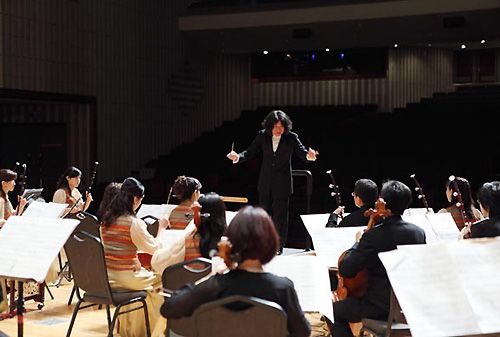
:::?????? Kaohsiung City Chinese Orchestra:::??::: (http://www.kcco.org.tw/main.php)
Source: Hugo Classics CD (my rip!)
Format: mp3, 320k/s (CBR) DDD Stereo
File Size: 176 MB (incl. booklet)
Download Link – https://mega.co.nz/#!VJwFhLhb!fQyFXwg0x_DtNckaaAdFJhNLaRIxFKOk0zKSHCK dDqg
Enjoy! Don’t share! Buy the original! 🙂
This is a neat collection of lighter-hearted short orchestral works by three most
distinguished Welsh composers of the 20th century: Alun Hoddinott, William Mathias
and Daniel Jones.
Music by Alun Hoddinott, William Mathias & Daniel Jones
Played by the Royal Philharmonic, Philharmonia, National UK Youth & BBC Welsh Symphony Orchestras
Conducted by Charles Groves, Arthur Davison & Bryden Thomson
"It is certainly not a common occurrence to find oneself reviewing an issue dedicated to music by
three Welsh composers, but this CD is not only a voyage of discovery of a still obscure musical world,
but alsoa gild-edged opportunity to enjoy some of the best British pieces composed during the
second half of the 20th century.
Maybe the only qualm I have is the way the programme is distributed. Alun Hoddinott (1929-2008) is
represented by five works while William Mathias (1934-92) and Daniel Jones (1912-93) are only credited
with one each. Still, in spite of this imbalance, there is much to enthuse about. Hoddinott’s three sets
of dances are punctuated by many jubilant and rambunctious moments, interspersed with others that
are less bouncy but more reflective.
The Concerto Grosso #2 is a showcase of virtuosity while the "Jack Straw" overture dedicated to the
14th century English rebel has a baleful dramatic opening, but culminates with a vividly exciting climax.
Mathias’ "Celtic Dances" represent the musical characteristics of all four British countries and each
piece evokes the mythological past of each nation, albeit in modern terms. Finally, Jones’ "Dance
Fantasy" is a short work but there is an air of stately grandeur about it. A certain lightness of touch
also permeates this set of unbroken variations, which has become the composer’s most performed work.
The playing is vibrant and committed, with orchestras and conductors excellent advocates of this
brilliant but sadly neglected repertoire. A thrilling disc excellently annotated and remastered."
Classical Net
Source: Lyrita CD (my rip!)
Format: mp3, 320k/s (CBR), ADD Stereo
File Size: 150 MB
Download Link – https://mega.co.nz/#!6xJRBD6Z!CIUickWH9v8Nafq_vilCrh8_7HNv1tJGaKfV37l pHLw
Enjoy! Don’t share! Buy the original! 🙂
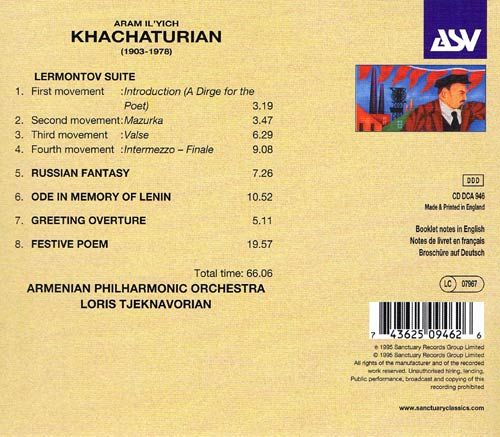
Allow me to post it in FLAC, because the disc was a pleasant surprise.
Download Khach Lemontov ASV rar (http://filewinds.com/9yscp2crw2fi/Khach_Lemontov_ASV_.rar.html)
================================================== =================================================
FILM MUSIC Composed by Aram Khachaturian
Played by the Armenian Philharmonic Orchestra
Conducted by Loris Tjeknavorian
https://www.hdtracks.com/index.php?file=catalogdetail&valbum_code=743625096620
FLAC DOWNLOAD
Download Khach FilmM ASV rar (http://filewinds.com/jsrvifv2nh6i/Khach_FilmM_ASV_.rar.html)
1. Pepo: Ov
2. Pepo: Pepo’s Song
3. Undying Flame: Intro (Ov)
4. Undying Flame: Bruno’s Return To His Homeland
5. Undying Flame: Rebels Capture Bruno In The Forest
6. Undying Flame: Bruno At The Consistory Court
7. Undying Flame: Banishment And Wanderings
8. Undying Flame: Dance Before The Queen
9. Undying Flame: The Battle And Christ
10. Undying Flame: Finale
11. Secret Mission: Ov
12. Secret Mission: The Pilot
13. Secret Mission: The Ardennes
14. Secret Mission: Surrender
15. Secret Mission: Armaments-Finale
16. Admiral Ushakov: Ov
17. Admiral Ushakov: Battle
18. Admiral Ushakov: Funeral
19. Admiral Ushakov: Russian Sailors In Naples (The Review Of The Fleet)
20. Admiral Ushakov: Finale
21. Prisoner No.217: Ov
22. Prisoner No.217: Murder
23. Prisoner No.217: In The Prison
24. Prisoner No.217: Work-Recapulation-Finale
No.348
Fanfares, whether used in logos, main titles or as incidental music, have always played a big part in
movie scores. In 1998, the Auckland Philharmonia commissioned eleven fanfares from local New Zealand-born
or based composers to be premiered by the orchestra in the year leading up to 31 December 1999 and the
turn of the millennium. Each fanfare was to be approximately three minutes long and both reflect the
composer???s feelings about the twentieth century as well as give a vision for the future.
Christopher BLAKE: Auckland!
Eve de CASTRO ROBINSON: Other echoes
John RIMMER: Vulcan
Juliet PALMER: Secret Arnold
John PSATHAS: Luminous
Lisa MERIDAN-SKIPP: firecracker
John ELMSLY: Resound!
Dorothy BUCHANAN: Peace
Chris CREE BROWN: Y2K Pacemaker
Philip DADSON: MAYA
David HAMILTON: Zarya
Played by the Auckland Philharmonia
various conductors
"Collections of fanfares are if not unheard of at least unusual. There have been previous collections.
I can think of the RCA anthology of British fanfares reissued on Chandos and the Koch anthology
based on those commissioned by Eugene Goossens in the 1940s.
The present anthology is taken from concert performances of works for full orchestra. They strain at
the bounds of what we expect from a Fanfare. All are lucidly recorded with great resonance and
with applause. The composers are not household names in the international concert world. The
Blake is a work of fresh grandeur. The Castro-Robinson reflects flighty modernism: Ariel careering
around the skies with hints of Pettersson, Messiaen, Rautavaara (those arctic birds are very familiar)
and Turnage. Rimmer’s grim gruff brassy expostulation took me back to Arthur Butterworth’s
Symphony No. 1 – especially the finale. Palmer’s work is oddly titled, a rich Schoenbergian mix with
The Wailers it wont come easy and Only You by Portishead. More attractive than you might imagine.
Psathas’s work is a Petterssonian lament for a friend who moved from New Zealand to China but
was overwhelmed by the pressure to assimilate into a culture so radically different. The Meridan-Skipp
work is fragmentary – flooded with explosive squeals and ringing ticking effects. The Elmsly bends
minimalism with Arnold like lyrical release and percussive rush. The Buchanan is alive with sounds
associated with Pacific culture, woody drum rhythms, Gareth Farr’s excitement and Lilburn’s Sibelian
rise and fall. Much the same qualities seem at first to shake and shimmer through MAYA with added
pepper and with shouts by the men of the orchestra however this seems a rough draft rather than
fully conceived statement. Brown harries us with piercing bird shriek string figures and angry brass –
not the most appealing work on the disc. Hamilton uses the Russian word for ‘sunrise’ in a five
minute crescendo rising from a crystalline pp, developing with rustling vitality and punchy
affirmation into the rolling fanfares so typical of Lilburn and Hanson.
None of these works are archetype fanfares. They might just as easily be called tone poems.
They are challenging but yield results with moderately rugged persistence."
Musicweb
Source: Atoll CD (my rip!)
Format: mp3, 320k/s (CBR), DDD Stereo
File Size: 132 MB
Download Link – https://mega.co.nz/#!EIxm1AjK!dnAjs1Mn2ACtqG_PqljPR25a29pOhr4G9Hd3sZ4 qVwM
Enjoy! Don’t share! Buy the original! 🙂
Bronisław Kazimierz Przybylsk (1941-2011) was a Polish composer. A graduate of the PWSM in Ł???dź,
where he received diplomas in music theory (in 1964) and composition (in 1969); he continued his studies
in 1975-77 with R. Haubenstock-Ramati at the Hochschule f???r Musik und Darstellende Kunst in Vienna.
Since 1963 he had lectured at the PWSM (now the Academy of Music) in Ł???dź, since 1991 as chair of
the composition department, from 1992 as Professor. He has won, among others awards: third prize
(in 1972) and second Prize (in 1974, first was not awarded) at the G. Fitelberg Composition Competition
in Katowice, II and III prizes (in 1972 and 1974) at the Composition Competition of the Polish Radio and
Television in Warsaw, awards at the H. Wieniawski International Composition Competition in Poznań (1976),
the Minister of National Defense???s Award, third degree (in 1973), the Minister of Culture and Art???s Award,
first degree (in 1980) and the Prime Minister’s Award (in 1981). In 1999 he received the Knight’s Cross
of the Order of the Polonia Restitua. Chamber works and solo music dominate Przybylski???s output, in
which the composer experiments with materials, texture and form, however his orchestral works
are most significant.
His orchestral works tend to be more traditional, although contemporary techniques are invoked
throughout. This upload features the Sinfonia Polacca, the suite Folklore, To Warsaw
and Return, all concerned (to some extent) with Polish national/musical identity.
Please note that this posting features only one of the two CDs included in the original album!
Music Composed by Bronislaw Przybylski
Played by the Polish Radio and Television & the Polish National Radio Symphony Orchestra
Conducted by Szymon Kawalla & Antoni Wit
"He was a prominent composer and a highly respected teacher and organizer of musical life in his
native town. He graduated from the State Higher School of Music in Ł???dź (now the Music Academy),
where he studied music theory with Franciszek Wesołowski (diploma in 1964) and composition with
Tomasz Kiesewetter (diploma in 1969). He continued his compositional studies with Bolesław
Szabelski in Katowice (1965-67) and Roman Haubenstock-Ramati at the Hochschule f???r Musik
und darstellende Kunst in Vienna (1975-77).
From 1963 till the end of his life, he served as a member of faculty of his Alma Mater (from 1992 as professor).
He was Deputy Rector for academic affairs (1978-81), Dean of the Department of Composition and Music
Theory (1987-90) and Head of the Faculty of Composition (from 1991). For over twenty years
(from 1987) he led a composition class, also lecturing in Germany, the Netherlands and Luxembourg.
He was the initiator of the biannual ???Musica moderna??? sessions at the Academy. Launched in 1982,
they featured a wide range of concerts and lectures on contemporary music.
Bronisław Kazimierz Przybylski was a prize-winner of numerous competitions, including two major
international events: the UNESCO International Composers??? Rostrum in Paris (1984, Fourth Prize
for A Varsovie for orchestra) and Premio di Composizione per letteratura pedagogica CEMEX Opere
segnalate, Castelfidardo (1995, for Maskerade for accordion solo). His honours included the award
from Minister of Culture and Art (1974, 1980, 1991), the Honorary Badge of Merit of the City of Ł???dź,
the Gold and Silver Crosses of Merit, the medal of the Commission for National Education, the Prime
Minister???s Award for his achievements in the art for children, the Knight???s Cross of the Order of
Reborn Poland and the awards from the Rector of the Music Academy in Ł???dź. He was a member
of the ZAiKS Authors and Composers Association (from 1971) and the Polish Composers??? Union
(from 1975, also Chairman of its Ł???dź Branch from 1986).
B.K. Przybylski???s works were featured at many prestigious festivals in Poland and abroad, including the
Warsaw Autumn, Poznań Musical Spring, Musica Polonica Nova in Wrocław, the Festival of Premieres
in Katowice, the World Music Days in Tel-Aviv, Musikprotokoll in Graz and the Composers??? Rostrum in
Paris. They were also performed in many European countries, the United States, Canada, Mexico,
Japan, the Republic of South Africa and New Zealand.
B.K. Przybylski died in his home town Ł???dź on 4 April 2011, after a short and serious illness."
Source: DUX Records (my rip!, CD2 of 2)
Format: mp3, 320k/s (CBR), DDD Stereo
File Size: 183 MB (incl. booklet)
Download Link – https://mega.co.nz/#!TwwTTT5A!cgV4PQri7F93ZLHj3_ntBThr7UpbfguFFg6tULc f-ac
Enjoy! Don’t share! Buy the original! 🙂
Herbert Hamilton Harty (1879-1941) had a successful career in more than just one musical arena.
He was a church organist, composer, conductor, and piano accompanist, with all of his efforts being
well-respected by his peers. His musical training began with his father, an organist in the Northern Ireland
village where he was born. Bertie learned viola, piano, and counterpoint from him. Still a teenager, Harty
was engaged as organist in Bray, near Dublin. While there, he first met the Italian composer Michele
Esposito, professor of piano at the Royal Irish Academy of Music, who told Harty that his thumbs were
too small for him to be a good pianist. However, after listening to Harty play, Esposito changed his mind
and became a mentor to him.
In 1897, a national competitive music festival was started in Dublin, the Feis Ceoil, where Harty became
the official accompanist. This was where he first accompanied and befriended John McCormack. Harty
entered his own String Quartet, Op.1, in the composition competition in 1900 and was met with
praise from the press. He entered chamber or orchestral works annually after that, winning in 1904 for
his An Irish Symphony. He himself conducted the performance, receiving an ovation and
admitting later that it was his first time conducting an orchestra. Harty had moved to London in 1900
to seek his fortune. He became known for his skillful accompaniment of vocalists and instrumentalists,
such as Joseph Szigeti and Fritz Kreisler. After the success of his conducting premiere, he began
conducting in England. He was named permanent conductor of the Hall??? Orchestra in 1920. During his
tenure, he introduced the music of Bax, Sibelius, Casella, Berlioz, Moeran, and Strauss to Manchester
audiences and expanded the orchestra’s reputation throughout the country.
All three works, the Irish Symphony, the tone poem With the Wild Geese, and the rhapsody
In Ireland, for flute, harp and orchestra, are among Harty’s most popular and best-remembered.
He wrote in an eclectic style that embraced influences of composers from Dvor???k to Rachmaninov.
Music Composed by Hamilton Harty
Played by the RT??? National Symphony Orchestra of Ireland
Conducted by Proinssi???s ??? Duinn
"How could a album of Irish orchestral music miss that features three of the most popular
works of one of Ireland’s most celebrated composers, Sir Hamilton Harty (1879-1941), one
of Ireland’s most accomplished orchestras, the National Symphony of Ireland, and an Irish
conductor with the name of Proinnssias O Duinn? Tie it up in good sound and a budget
price and you have the well-known definition of a bargain on your hands.
All the works on the disc are pretty much tone poems, evocations of Irish life in war and
play. The leadoff selection is the 18-minute piece "With the Wild Geese" (1910), a varied
and moody work depicting an Irish regiment of soldiers fighting with the French in 1745.
The second, shorter, piece, "In Ireland" (1918, orchestrated in 1935), describes city life in
Dublin. Finally, "An Irish Symphony" (1904) arrives in four movements, with the suggestive
names "On the Shores of Lough Neagh," "The FairDay," "In the Antrim Hills," and "The Twelfth
Night." Its the quick, second-movement scherzo that is probably most familiar, quoting as it
does several popular Irish melodies. In fact, all the music is reminiscent of a hundred Irish folk
tunes you’ve probably heard over the years, none of them particularly memorable but all of
them contributing to the music’s overall entertainment value. This is not classical music of
any high or noble bent, just pleasant, sometimes nostalgic, often relaxing, occasionally
cheering, and ultimately rewarding music.
The Naxos sound is up to the task, too, with good dynamics, a reasonably wide frequency
response except perhaps in the very lowest registers, and a fine degree of sparkle.
It’s sound that fits the music, and I heartily recommend it."
Sensible Sound
Source: Naxos CD (my rip!)
Format: mp3, 320k/s (CBR), DDD Stereo
File Size: 133 MB (incl. covers & booklet)
Download Link (re-up) – https://mega.nz/#!xcUWwaoJ!j3IDSfkL1wOD6-5a_wB9OTe8JJB6cCqYKBIlomUsDWo />
Enjoy! Don’t share! Buy the original! 🙂
Although the composer Joaquim Serra (1907-1957) is extremely famous within Catalonia,
he is unfortunately far less well-known to audiences beyond his homeland. This first CD of his orchestral
works, which we have taken such pride and enjoyment in recording, could therefore have an important
part to play in winning more widespread recognition for him and his works.
Serra wrote extensively, with 52 sardanas, ballets, variations and poems, for cobla, the typical, usually
eleven-member, Catalan band that accompanies dances such as the sardana, but was less prolific when
it came to symphonic and chamber compositions. The times in which he lived were of course less than
conducive to orchestral writing; there were neither many orchestras in Spain then, nor many well-
established concert societies or performance venues. Serra also lived through the tragedy of the
Civil War and the harshest years of the Franco dictatorship before his early death in 1957.
Nevertheless, his music is truly full of character: it has an extraordinary lyricism, underpinned
by appealing harmonic writing, an absolute mastery of orchestration, displaying both his understanding
of instrumental colour and a limpid, intricate and fluid use of counterpoint, and a unity of thematic
ideas, whose interpretation and development are always tinged with a fresh Catalan flavour, evoking
fresh mountain air, the scent of the Mediterranean and local dance rhythms.
Puigsoliu is a small-scale symphonic poem, originally written for cobla, of such beauty, optimism,
lyricism, originality and harmony, that I could not resist the temptation to orchestrate it. This
was in fact the composer???s last work and was first performed only three months before his death.
Impressions camperoles (Rural Impressions), dated 1927, is a very typically Catalan work, with
additional influences from French Impressionism. Albada (Dawn) is a perfect and poetic depiction of
daybreak. Mainada jugant (Children Playing) recalls those far-off, fun-packed days of children???s games.
Sota els pins (Beneath the Pines) is very serene, contemplative and tender. La vall dels ecos (The Valley
of Echoes) is a very short movement of great originality, in which the brief thematic ideas are repeated
by muted trumpets, thereby providing the echo effect. Festa represents the elation of the dances
which are part of any Catalan festivity. The joyful and masterly combination of the two principal
themes is particularly noteworthy.
Rom???ntica, as its title suggests, is a passionate melody, soaring high on the strings, with a
short central section dominated by three solo interventions. Dues estampes simf???niques is a work
full of Spanish folk colour, very characteristic of its time. The two estampes are sparkling and brilliantly
orchestrated, Serra taking Andalusian folk-tunes and imbuing them with a Mediterranean quality. The
first includes an habanera in the central section and the second a relaxed and inspired nocturne,
also in the central section and played by the cor anglais.
Music Composed by Joaquim Serra
Played by the El Vall???s Symphony Orchestra
With Emili Brugalla (piano)
Conducted by Salvador Brotons
"The Catalan composer Joaquim Serra wrote prolifically for cobla, the typical eleven-strong
Catalan band. These works and his concert output are completely unknown outside Catalonia.
This is why the present release is most welcome. All the works here clearly show that Serra???s
music, though often typically Catalan in tone and mood, bears the imprint of French
Impressionism and, to a certain extent, of Respighi and ??? of course ??? of early de Falla.
This is quite obvious in the delightful Impressions camperoles of 1927. This colourful work
opens with a lovely Albada ("Dawn"). A lively Scherzo ("Children Playing") is followed by a
beautiful Pastorale ("Beneath the Pines") and "The Valley of Echoes" in which tune fragments
are tossed around the orchestra. The last movement is an exuberant Fiesta.
The Variations for orchestra and piano (and not the other way round!) is the most ambitious
and substantial work in this selection. It often brings d???Indy???s Symphonie c???venole to mind.
It is a beautifully crafted piece of music in which Serra???s unquestionable orchestral mastery
is fully displayed.
The Two Symphonic Sketches (no date given, but most likely dating from the same period)
are lighter in mood and character, but again quite attractive; as is Rom???ntica (again no
date given).
Puigsoliu, Serra???s last completed work, was originally written for cobla, but is heard here in
Salvador Brotons??? excellent orchestral transcription. Another engaging piece of music of
great charm.
When listening to these attractive works, I often thought of some early 20th Century
French composers, of Respighi and of early de Falla, though Serra???s music has some
welcome unpretentious freshness of its own which is one of its most endearing qualities,
besides his remarkable orchestral flair.
Brotons and his players obviously enjoy themselves very much and their committed
performances serve the music well. A minor master, maybe, but there is much to enjoy
in this delightful and colourful music."
Musicweb
Source: Naxos CD (my rip!)
Format: mp3, 320k/s (CBR)
File Size: 145 MB (incl. cover, booklet)
Download Link (re-up) – https://mega.co.nz/#!U5UUAQ5b!a4GBy06WZEOy093gMokmUgPW7SgQGMkNtJYXVUT 52iA
Enjoy! Don’t share! Buy the original! 🙂
After an increasingly musical adolescence, Australian composer Gerard Brophy (*1953) began his studies in the
classical guitar at the age of twenty-two. In the late seventies he worked closely with Brazilian guitarist
Turibio Santos and the Argentine composer Mauricio Kagel before studying composition at the NSW
State Conservatorium of Music.
He has been commissioned and performed by some of the world???s leading ensembles, including the
Melbourne, Queensland, Tasmanian, West Australian, Sydney and New Zealand Symphony Orchestras:
the Malaysian Philharmonic; and the BBC Philharmonic and Symphony Orchestras, to name a few. Over
recent years he has developed a keen interest in collaborating with artists from other disciplines and
he is particularly active in the areas of ballet, dance and electronica. He has also been involved in
exciting collaborations with musicians from other cultures among them the great Senegalese master
drummers, the N???Diaye Rose family, and the timbila virtuoso Venancio Mbande from Mozambique.
Forbidden Colours by the Tasmanian Symphony Orchestra was released Apr 14, 2009
on the ABC Classics label. The sensual music of Gerard Brophy ranges across a world of music,
from the African Portuguese fusion of Brazil in Maracat??? and the middle eastern flavours of
Republic of Dreams to the mesmerising rhythms of Mantras. This album also features
two earlier works, the intricate, virtuoso piano concerto Le r???veil de l’ange (The Awakening of
the Angel) and Forbidden Colours, a gossamer web of delicate orchestral colour.
Music Composed by Gerard Brophy
Played by the Tasmanian Symphony Orchestra
With Lisa Moore (piano) & Philip South (darabukka)
Conducted by Dobbs Franks and Kenneth Young
"For more than six decades the Tasmanian Symphony Orchestra has been at the
forefront of concert life in Tasmania.
Established in 1948 and declared a Tasmanian Icon in 1998, the TSO gives over 60
concerts annually including seasons in Hobart and Launceston, and appearances in
Tasmanian regional centres. In recent years the TSO has performed at City Recital Hall
Angel Place in Sydney, Melbourne Recital Centre and the Adelaide Festival. International
touring has taken the orchestra to North and South America, Greece, Israel, South Korea,
China, Indonesia and Japan.
Resident in Hobart???s purpose-built Federation Concert Hall, the TSO has a full complement
of 47 musicians. Marko Letonja is the orchestra???s Chief Conductor and Artistic Director.
With more than 60 CDs in its catalogue including 20 titles in the Australian Composer Series
and 10 in the Romantic Piano Concerto Series, the TSO is known and heard nationally and
internationally. Among the TSO???s award-winning recordings are Mozart Arias with Sara
Macliver, and Baroque Guitar Concertos with Slava Grigoryan. TSO concerts are recorded
by ABC Classic FM and broadcast and streamed throughout the world.
Mindful of its mission to be a source of pride for all Tasmanians, the TSO performs a wide
variety of music. Vladimir Ashkenazy, Daniel Barenboim, Alfred Brendel, Lisa Gasteen, Nigel
Kennedy, Sara Macliver, Howard Shelley, Teddy Tahu Rhodes and Richard Tognetti are among
the soloists who have appeared with the orchestra. Popular and jazz artists who have
performed with the orchestra include Rhonda Burchmore, Kate Ceberano, Natalie Cole,
Roberta Flack, Tim Minchin, James Morrison, Anthony Warlow, Human Nature and The Whitlams."
Source: ABC Classics (my rip!)
Format: mp3, 320k/s (CBR), DDD Stereo
File Size: 147 MB
Download Link – https://mega.co.nz/#!xYJUCBjD!G6Bu7y3M0COzPdf40jM9NHoFG4cgh-XxiXJlqObg1mQ
Enjoy! Don’t share! Buy the original! 🙂
Stimulated by Stravinsky???s Rite of Spring, Akira Ifukube (1914-2006) taught himself
composition, while working as a forestry officer. His works, characterized by persistent ostinato,
percussive sounds and multi-cultural melodies and rhythms, have something in common with
the music of Orff, Khachaturian and Revueltas. Ifukube wrote scores for some 300 films, collaborating
in particular with Kurosawa, Naruse and Joseph von Sternberg. His music for the popular Gojira
series of monster films is widely known.
Sinfonia Tapkaara was inspired by the primitive dances and songs of the ancient Japanese
tribe, the Ainu, who stomped their feet to worship the earth. Ritmica Ostinata is a single
movement ???minimalist??? piano concerto alternating passages of increasingly propulsive energy with static,
dream-like interludes. The Symphonic Fantasia No.1 is a concert arrangement by the composer
himself, of his music for monster films including the famous Gojira theme.
Music Composed by Akira Ifukube
Played by the Russian Philharmonic Orchestra
With Ekaterina Saranceva (piano)
Conducted by Dmitry Yablonsky
"Akira Ifukube (b. 1914) is best known as the composer of the scores to the various Godzilla films.
His Symphonic Fantasia No. 1 is in fact an arrangement of themes from the various monster movies,
and a very skillful one. Ifukube???s style takes its inspiration from Stravinsky and the French neo-classicists
(such as Roussel), and from nationalist composers of the same period such as Falla. Folk-tinged melodies
mingle with bracing passages full of driving, syncopated rhythms. Sinfonia Tapkaara, for example, has
much in common with the sound of Portuguese composer Joly Braga Santos (if you???ve been following that
series on Marco Polo, compare the finale to the last two movements of Santos??? Divertimento No. 1).
Its slow movement features a lovely tune that begins like the Romance from Prokofiev???s Lt. Kij???. Ritmica
Ostinata for piano and orchestra sounds like a continuation of Colin McPhee???s Tabuh-Tabuhan, with its
Asian-influenced ostinatos and minimalist aesthetic. Original it may not be, but it???s tremendous fun,
very well-written, and though drawing on familiar elements, the mix is Ifukube???s own.
King Records in Japan has issued a series of discs devoted to Ifukube???s works in various media. These
are not easy to find here, and ordering them from Japanese sources is quite expensive. That makes this
Naxos disc especially welcome. The performances are all very good ones, full of the necessary driving
energy, and Dmitry Yablonsky has his ensemble in good shape. In Ritmica Ostinata, pianist Ekaterina
Saranceva does a particularly fine job with a part that requires lots of endurance and a sharp
rhythmic sense. The engineering also balances the solo instrument correctly, as a leading voice
embedded within the orchestral textures rather than front and center at all times. This is the kind of
disc that really deserves popular success beyond the usual classical music crowd, and Naxos might
do well to invest some time and effort in making more of Ifukube???s concert pieces available. They
could have a genuine hit on their hands."
Classics Today (9/9)
Source: Naxos CD (my rip!)
Format: mp3, 320k/s (CBR), DDD Stereo
File Size: 143 MB (incl. cover, booklet)
Download Link – https://mega.co.nz/#!qgBFFABD!VIXyKm5HUrdy8nJ9QVz7Dzxhl_9qjqxpX-eMiyZ_xBo
Enjoy! Don’t share! Buy the original! 🙂
One final upload before my beer-drenched sabbatical. 🙂
Thanks for Sinfonia Tapkaara!! :’D
Mario Castelnuovo-Tedesco (1895-1968), born in Florence, Italy, studied composition and pianoforte at the Istituto
Musicale Cherubini and later at the Liceo Musicale of Bologna. His mentors were Pizzetti and Casella,
members of the influential and progressive Societ??? Italiana di Musica, a group of composers (including
Malipiero and Respighi), with whom Castelnuovo-Tedesco became closely associated.
In 1938, as a result of Mussolini???s anti-Jewish edicts, Castelnuovo-Tedesco decided to leave for the
United States.
The art of William Shakespeare was a recurring fascination for Mario Castelnuovo-Tedesco. In the early
1920s he set to music 33 songs from the plays as well as 35 sonnets. In addition to the eleven Overtures featured here,
he also wrote two Shakespeare operas, The Merchant of Venice and All’s Well That Ends Well.
The overtures were composed in the following order:
La bisbetica domata (The Taming of the Shrew), op.61 (1930)
La dodicesima notte (Twelfth Night), op.73 (1933)
Il mercante di Venezia (The Merchant of Venice), op.76 (1933)
Giulio Cesare (Julius Caesar), op.78 (1934)
Il racconto d???inverno (The Winter???s Tale), op.80 (1935)
A Midsummer Night???s Dream, op.108 (1940)
King John, op.111 (1941)
Antony and Cleopatra, op.134 (1947)
The Tragedy of Coriolanus op.135 (1947)
Much Ado about Nothing, op.164 (1953)
As You Like It, op.166 (1953)
Music Composed by Mario Castelnuovo-Tedesco
Played by the West Australian Symphony Orchestra
Conducted by Andrew Penny
"All of the overtures were conceived as stand-alone concert works, not as curtain-raisers
to operas or incidental music to staged productions of the plays, and not as film music to accompany
the rolling of the opening credits. As such, C-T???s overtures avoid storytelling; they do not attempt
in a few minutes??? time to telescope the action of the plots. Instead, they take their cue from one or
more specific events in the plays and develop a strictly musical narrative around them. This downplays
programmatic associations and lends each overture a sense of structural integrity as a complete
entity unto itself, worked out entirely in formal musical terms.
Over time, the overtures grew, not necessarily in length???though the 1947 Antony and Cleopatra
expanded to nearly 18 minutes???but in ambition of orchestration. Where the 1930 Taming of the
Shrew employs strings, double woodwinds, four horns, two trumpets, timpani, harp, piano, and
percussion???hardly a modest-sized orchestra???the later overtures triple the winds and add English
horn, contrabassoon, tuba, a second harp, tubular bells, glockenspiel, castanets, and a battery of
various drums. Moreover, augmented string sections now find their parts frequently divided, and
section leaders are highlighted in many striking solo passages. ???The more grandiloquent moments,???
observe Andrew Penny and Graham Wade in their booklet note, ???anticipate the epic sweep of
Mikl???s R???zsa???s film scores for Ben Hur or Quo Vadis of the 1950s.???
While certain parallels may exist, it should be emphasized that C-T???s overtures are serious
symphonic works. They are not the stuff of movie soundtracks or, in arrangements, of summer-
evening pops concerts. They are, however, not truly of their time???a statement that could apply to
Respighi as well???in that they are big, bold, brightly painted musical billboards in a post-Romantic/
Impressionist style that feature many of the same exoticisms and techniques one hears in scores
like Respighi???s Roman Trilogy.
I take Naxos at its word that these are world premiere recordings; therefore, it is taken as an article
of faith that other versions for comparison purposes do not exist. No matter, for the performances
here by Andrew Penny and his West Australian Symphony Orchestra sound aces to me, and the
recording has plenty of headroom for maximum impact in the music???s most massively scored
passages. I can???t imagine why anyone would not be taken with these highly attractive scores.
Definitely recommended."
Fanfare
Source: Naxos CDs (my rip!)
Format: mp3, 320k/s (CBR), DDD Stereo
File Size: 290 MB (incl. covers & booklets)
Download Link – https://mega.co.nz/#!5NIw3DTA!N1pJiQ7zaDFklIbODbwCzjOmNrNLp2yhawezNAL 2vO0
Enjoy! Don’t share! Buy the original! 🙂
Alberto Ginastera – Panambi, Estancia
7.html#post2208694 (http://forums.ffshrine.org/f92/wimpel69s-could-film-music-classical-corner-work-121898/7.html#post2208694)
Re-Up Link:
https://mega.co.nz/#!Ec1BiQhK!M5UUVmQAVuJxmZUI9xOUxi5ZXu9yZszkRSO2abb IhTA
Anthony DiLorenzo – Dracula, the Seduction
6.html#post2205656 (http://forums.ffshrine.org/f92/wimpel69s-could-film-music-classical-corner-work-121898/6.html#post2205656)
Re-Up Link:
https://mega.co.nz/#!0RdQlIhR!XKqcXyUJbkJird_by7Ak2ySPOUBHTzfufTrUlru racM
Avshalomov; Silver; Meyerowitz – Jewish Tone Poems
5.html#post2196680 (http://forums.ffshrine.org/f92/wimpel69s-could-film-music-classical-corner-work-121898/5.html#post2196680)
Re-Up Link:
https://mega.co.nz/#!0NdAkKBA!aCe7uFwedmnF9uw6yelK2SZfnRNUaLis8o-zjZuFCBU
Du Ming-Xin, et al. – The Red Detachment of Women
4.html#post2194375 (http://forums.ffshrine.org/f92/wimpel69s-could-film-music-classical-corner-work-121898/4.html#post2194375)
Re-Up Link:
https://mega.co.nz/#!1I1CwTKR!dHuCTVCg2jOyoiMzjNv7Kw9Q3VcCLtTD4Qcs6eU 4UNI
Engelbert Humperdinck – Fairy-Tale Music
4.html#post2195263 (http://forums.ffshrine.org/f92/wimpel69s-could-film-music-classical-corner-work-121898/4.html#post2195263)
Re-Up Link:
https://mega.co.nz/#!dQM0mbBZ!cpKeiTPDa7E0Xufyyb65LV-wB0tjHY5qNcfmU91-VdA
Florence Price – The Oak, Mississippi River Suite, Symphony No.3
5.html#post2197170 (http://forums.ffshrine.org/f92/wimpel69s-could-film-music-classical-corner-work-121898/5.html#post2197170)
Re-Up Link:
https://mega.co.nz/#!cZlWmDSD!EUIcehuQwmmpNtWfkXc_11d1QiJdzcgiyW473Pm U4GI
Geirr Tveitt – Prillar, Sun God Symphony
5.html#post2198548 (http://forums.ffshrine.org/f92/wimpel69s-could-film-music-classical-corner-work-121898/5.html#post2198548)
Re-Up Link:
https://mega.co.nz/#!oRdD1aJK!MSnreUKC6O6m89GoBYteAm1jZdsH9xc2i59JWnd Lf6g
In Celebration of Israel (Weill, Chajes, Fromm, Helfman, Secunda, Scharf)
8.html#post2209359 (http://forums.ffshrine.org/f92/wimpel69s-could-film-music-classical-corner-work-121898/8.html#post2209359)
Re-Up Link:
https://mega.co.nz/#!xJ9UHLLB!M6KYM0-4yuG3v1YZIMSksXfRL4dyMqGI709mHTcpOAU
Ingolf Dahl – Defining Dahl
7.html#post2206451 (http://forums.ffshrine.org/f92/wimpel69s-could-film-music-classical-corner-work-121898/7.html#post2206451)
Re-Up Link:
https://mega.co.nz/#!0IsnxZYJ!Xg2FD395jx2ENyES39ttjwjcgHps5NtepebD1Zy OeEQ
Jarmil Burghauser – The Ways
4.html#post2194185 (http://forums.ffshrine.org/f92/wimpel69s-could-film-music-classical-corner-work-121898/4.html#post2194185)
Re-Up Link:
https://mega.co.nz/#!xYlUUTgL!SSFH3xYRGGk6-268rcB4IEDM-GU5D0KKHbtra4gRm9o
Joseph Guy Ropartz – Pecheur d’Islande, Rhapsodie pour Violoncelle, Oedipe ??? Colone
4.html#post2194185 (http://forums.ffshrine.org/f92/wimpel69s-could-film-music-classical-corner-work-121898/4.html#post2194185)
Re-Up Link:
https://mega.co.nz/#!ddtUhBJb!GNEit32HxfBbCGl-ZCgvFWkMxBsA4iQLMfG_xEoJAmQ
Karol Rathaus – The Last Pierrot, Symphony No.1
5.html#post2197398 (http://forums.ffshrine.org/f92/wimpel69s-could-film-music-classical-corner-work-121898/5.html#post2197398)
Re-Up Link:
https://mega.co.nz/#!oR80TZha!Bb-dk0ct7DQYyMus-KSFoUrZPNsQ3DxhYZohz573Evs
Latin American Ballets (Villa-Lobos- Uirapur???, Ch???vez- Horse Power Suite; Ginastera- Estancia)
5.html#post2198563 (http://forums.ffshrine.org/f92/wimpel69s-could-film-music-classical-corner-work-121898/5.html#post2198563)
Re-Up Link:
https://mega.co.nz/#!9dMWyBiY!OABc5gW88t7HavPh2h0P_QwMEocFPA5uk3ou-5rxs1w
Manuel de Falla – The Three-Cornered Hat, Nights in the Gardens of Spain
6.html#post2200473 (http://forums.ffshrine.org/f92/wimpel69s-could-film-music-classical-corner-work-121898/6.html#post2200473)
Re-Up Link:
https://mega.co.nz/#!wUEUnDbS!f0hP2CY1tm7JsxnhxH7NGh8jiuRAkIdtp-wT4sO0_8M
Morton Gould – Fall River Legend
6.html#post2200733 (http://forums.ffshrine.org/f92/wimpel69s-could-film-music-classical-corner-work-121898/6.html#post2200733)
Re-Up Link:
https://mega.co.nz/#!RJVjDIRb!ArAiFTKCU4nGsfVqfDueFj810fBfjsdEv7gJO05 lAj4
Philip Feeney – Dracula (Ballet in 3 Acts)
6.html#post2205656 (http://forums.ffshrine.org/f92/wimpel69s-could-film-music-classical-corner-work-121898/6.html#post2205656)
Re-Up Link:
https://mega.co.nz/#!UcFzDJiT!P2ke0hi575F4vmUgFAHbLxlOYQs7Ro6ZKke7nDT 1cOw
Tanz Grotesk- Der Geburtstag der Infantin (Schreker); Die Monds???chtige (Schulhoff); Der D???mon (Hindemith)
5.html#post2198585 (http://forums.ffshrine.org/f92/wimpel69s-could-film-music-classical-corner-work-121898/5.html#post2198585)
Re-Up Link:
https://mega.co.nz/#!9AkVDKzS!erTSKyEqxByETNJOqDMfyWkjjeJn2pEMnGYukat HBQA
Tikhon Khrennikov – Napoleon Bonaparte
4.html#post2195179 (http://forums.ffshrine.org/f92/wimpel69s-could-film-music-classical-corner-work-121898/4.html#post2195179)
Re-Up Link:
https://mega.co.nz/#!8IkHhTaC!Ka-qAA9TohsA2ouV_p4H-gdnGrAx3llkahu-p_lGXJg
Walter Leight – Overture Agincourt, A Midsummer Night’s Dream, etc.
5.html#post2197244 (http://forums.ffshrine.org/f92/wimpel69s-could-film-music-classical-corner-work-121898/5.html#post2197244)
https://mega.co.nz/#!dUVXEJqJ!dizeRiHJbjAuoQxGrwZaChCgatkjl6wFZEMtjLM EC3g
Thanks again to Herr Salat for his efforts! 🙂
Gerard Schurmann was born of Dutch parents in the former Dutch East Indies in 1924, but lived
in England from childhood until 1981, when he settled in the United States. He studied composition
with Alan Rawsthorne, who became a lifelong friend, piano with Kathleen Long and conducting with
Franco Ferrara. The recipient of numerous international awards and commissions, Gerard Schurmann
has written music for a wide variety of media. His catalogue of concert works includes Six Studies
of Francis Bacon (1968) and Variants (1970) for orchestra, The Gardens of Exile (1989-90)
for cello and orchestra, the opera-cantata Piers Plowman(1979-80), the choral cantata The Double
Heart (1976), concertos for Violin and Piano and many solo instrumental works, songs and chamber
music. Schurmann’s Concerto for Orchestra was commissioned by Lorin Maazel and the Pittsburgh
Symphony Orchestra and first performed by them for their centenary anniversary concert in March 1996,
with conductor Edo de Waart. The piece was subsequently recorded on the Chandos label, alongside
Schurmann???s Violin Concerto, featuring the BBC Philharmonic conducted by the composer. Gaudiana
(2000-2001), a set of Symphonic Studies for Orchestra that draws its inspiration from the work of
the Catalan architect Antoni Gaudi, was written for and first performed by the Barcelona Symphony
Orchestra in 2005. Gerard Schurmann has now made his home in the USA, but continues to have
close musical ties with England and Europe.
In the film music comunity Schurmann is best known for his scores for Konga, Horrors of the Black Museum,
Hammer’s The Lost Continent and the 1984 Claretta. He also orchestrated, and partly co-composed,
Maurice Jarre’s Oscar-winning score for Lawrence of Arabia.
Music Composed and Conducted by Gerard Schurmann
Played by the BBC Symphony Orchestra
"In Six Studies of Francis Bacon, which received its first performance at the Dublin Festival last night conducted
by the composer, Gerard Schurmann has brought off an entirely successful translation into orchestral sound of
the impact of the painter who was his friend for several years. Not only is the range of Bacon’s own art from
the grotesque and savage to a kind of uneasy repose conveyed in vivid outline, the composer has added an
extra dimension in his own response. Through the medium of a large orchestra deftly controlled, and some
impressively rich harmonisation, Schurmann suggests emotions ranging from shocked awe to comedy."
David Williams, Daily Mail
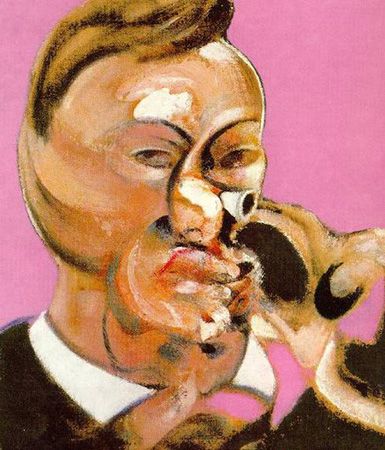
Francis Bacon: A Study of Gerard Schurmann
Source: Chandos CD (my rip!)
Format: mp3, 320k/s (CBR), ADD/DDD Stereo
File Size: 123 MB (incl. cover, booklet)
Download Link – https://mega.co.nz/#!pIp2lDYR!a5hezABVctupbzl_5sVqbS6bFEhr5mf-n-F3zeCbs0g
Enjoy! Don’t share! Buy the original! 🙂
Henry Kimball Hadley was born in Somerville, Massachusetts, on December 20, 1871. His father was a music
teacher in the Somerville public schools, his mother was a singer and pianist, and his brother, Arthur Hadley,
was a talented cellist who played with the Boston Symphony Orchestra. Obviously endowed with musical talent,
and encouraged by the praise of friends and critics, Hadley now devoted himself more diligently than ever before
to intensive musical study. Violin was studied under Henry Heindl and Charles Allen, harmony under Stephen A.
Emery, and counterpoint and composition with George W. Chadwick, whose influence on the young composer
was very marked. By his twenty-first birthday, Hadley had composed a string quartet, and a dramatic overture
for orchestra. In 1924 Henry Hadley was elected to the American Academy of Arts and Letters , and in 1933
he founded the National Association for American Composers and Conductors, which endowed the Henry
Hadley Memorial Library (the Americana Collection), now housed at the New York Public Library. He died in 1937.
The Ocean was composed, for the most part, in the autumn of 1920, but was not finally completed
until October of 1921. Hadley conducted its first performance at Carnegie Hall with the New York Philharmonic
on November 17, 1921. The music is based upon suggestions derived from a poem by Louis K. Anspacher
(1878-1947), entitled Ocean Ode. Hadley had stated that he concentrated his imagination upon certain particular
stanzas, rather than upon the poem as a whole. "Moreover," wrote Hadley, "I have not followed these strophes
in the order in which they appear in the Ode. I intended the first section to be (after a short introduction of
majestic harmonies for full orchestra) the Allegro proper of the work, suggesting the elements ‘let loose’
with all the fury and tumult of a tempestuous sea.
Hadley composed his rhapsody, The Culprit Fay in 1908. It won the $1,000 prize of the National
Federation of Music Clubs in 1909. Hadley conducted its first performance with the Theodore Thomas
Orchestra in May 1909, at Grand Rapids, Michigan. The work quickly became popular and was taken on
tour by other conductors, most prominently Frederick Stock in Chicago, Cincinnati and Detroit, and
Victor Herbert in New York and Memphis, Tennessee. Hadley’s rhapsodic orchestral treatment of Drake’s
charming, airy and magical poem effectively paints the adventures of a fairy (within a background of
Hudson River scenery), who loves a mortal maid. As punishment he is ordered by the fairy king to
catch a drop of the water raised by a sturgeon’s leap in the bright moonshine, and the last faint spark
of a shooting star. When the tasks are successfully completed he wins redemption and is welcomed
back into the company of his peers. General merriment breaks out until the cock crows to signalize
the coming of dawn and the end of the festivities. Brilliantly orchestrated, Hadley’s The Culprit Fay
has the orchestral shimmer of Dukas’ The Sorcerer’s Apprentice with the added romantic flair of
Richard Strauss’ tone-poems.
Between 1897 and 1935, Hadley composed five symphonies. Symphony No.4 in D minor, Opus 64
was composed for the Norfolk, Connecticut Festival and was first performed (conducted by the
composer) at a meeting of the Litchfield County Choral Union held in the Music Shed on the grounds
of Carl Stoeckel’s residence at Norfolk on June 6, 1911. Hadley conducted the work many times after
that, including at Queen’s Hall, London, and at the Worcester Festival in Massachusetts.
Music Composed by Henry Kimball Hadley
Played by the National Symphony Orchestra of Ukraine
Conducted by John McLaughlin Williams
"Henry Kimball Hadley (1871-1937) came from a highly musical Massachusetts family and
showed considerable compositional promise early in his life (he completed his first opera
at age 17). A major figure in Hadley’s development was George Chadwick, with whom
he studied counterpoint and composition before continuing his musical education in
Vienna. Hadley’s music shows an accomplished technique and, as with that of many
American composers of his generation, it bears heavy European influence (though in
Hadley’s case, it also contains occasional traces of his home soil). The Ocean, composed
between 1920 and 1921, is as atmospheric as its title suggests, displaying Hadley’s skill
at evocative orchestration. The musical language sounds at first to be purely impressionistic,
but further along there are indications of the German post-romantic style, especially
Zemlinsky. The Culprit Fay (1908) revels in the pre-impressionist sounds of Paul Dukas
(La Peri comes to mind) as it relates Drake’s fairy-tale poem.
It’s surprising that Hadley’s Symphony No. 4, composed three years later, sounds stylistically
like a much earlier work, with roots firmly planted in the 19th century. The four movements
act as a musical compass, describing the four regions of the globe: North portrays the frigid
artic regions in terse declamations reminiscent of Richard Strauss’ Macbeth; East is spiced
by "oriental" modes and colors; South, the most "American"-sounding movement, captures
that region’s flavor with the use of ragtime melodies; and West combines adventurous
"outdoors" music with Native American melodies and rhythms in a movement that not
surprisingly brings to mind Dvorak’s New World Symphony. This is really fine music and
you can’t help but wonder how it all but disappeared from modern concert programs.
But if it had received anything like the wholly persuasive and committed (as well as
enjoyable) performances provided by John McLaughlin Williams and the National
Symphony Orchestra of Ukraine, it certainly shouldn’t have. This team once again has
put together an irresistibly fresh and rewarding program, and Naxos has captured
it all in fine sound."
ClassicsToday
Source: Naxos CD (my rip!)
Format: mp3, 320k/s (CBR), DDD Stereo
File Size: 165 MB (incl. cover, booklet)
Download Link – https://mega.co.nz/#!QQoQWb4R!S15iSh4eX6HtJryqraZjSFg_aiQ6iROitCG-0dwiDME
Enjoy! Don’t share! Buy the original! 🙂
William Kraft (b. 1923, Chicago) has had a long and active career as composer, conductor, percussionist, and teacher.
Until June of 2002, he was chairman of the composition department and holds the Corwin Chair at the University of
California Santa Barbara. From 1981-85, Mr. Kraft was the Los Angeles Philharmonic???s Composer-in-Residence; for
the first year under Philharmonic auspices and the subsequent three years through the Meet The Composer program.
During his residency, he was founder and director of the orchestra???s performing arm for contemporary music, the
Philharmonic New Music Group. Mr. Kraft had previously been a member of the Los Angeles Philharmonic for 26
years; eight years as percussionist, and the last 18 as Principal Timpanist. For three seasons, he was also
assistant conductor of the orchestra, and, thereafter, frequent guest conductor. He also composed music for the
films Avalanche (1978) and Fire and Ice (1983).
Music Composed by William Kraft
Played by the Los Angeles Philharmonic, Alabama & Utah Symphony Orchestras
With Mary Rawcliffe (soprano), Jonathan Mack (tenor) & the Pasadena Boys Choir
Conducted by Andr??? Previn, Paul Polivnick & Christopher Wilkins (conductor)
"Those with an acquired taste for angry, complex, 12-tone-sounding social protest music
will find William Kraft’s Contextures II: The Final Beast (1985-1986) a superior specimen. Kraft
always keeps the music sounding purposeful, even when–as in this eight-movement song cycle
for soprano, tenor, and boys’ chorus–the harmonic center is lost in an atonal fog. The anti-war
work also explores Kraft’s interest in layering textures, and even incorporates a Renaissance ensemble
into the mix. Contextures II is the sequel to Contextures: Riots of the ’60s (1967/68), which the
Los Angeles Philharmonic and Zubin Mehta were rehearsing in 1968 when word came of Dr. Martin
Luther King’s assassination. The recording of that work made a few days later conveys a remarkably
intense feeling. Contextures II literally begins as the earlier work ended, exactly quoting its last few
measures. ("We Shall Overcome" is hidden in the texture.) The same orchestra, now led by Andr???
Previn, achieves a similar spirit, and Joanna Nickrenz’s outstanding engineering is a worthy match
for the justly praised first Contextures recording.
Interplay (1982-84) and Of Ceremonies, Pageants, and Celebrations (1986/87) also were premiered
by the Los Angeles Philharmonic, but here these "easier", more tonal-sounding works are recorded
by two different orchestras. Soloists are all first rate, and the three conductors all achieve a
high musical standard. It is a tribute to the general rise in the level of orchestral playing in America
that the Alabama Symphony and Utah Symphony sound nearly equal to their Los Angeles counterpart.
This First Edition release is a re-issue of Nonesuch 79229-2 and comes with the original liner notes.
Nickrenz’s skills as a recordist are reflected in the fact that despite featuring three different
orchestras recorded in three different halls, the album sounds like a single entity with consistent sound."
Classics Today
Source: Louisville First Edition CD (my rip!)
Format: mp3, 320k/s, ADD Stereo
File Size: 143 MB
Download Link – https://mega.co.nz/#!D5YFlYCJ!eg0c6iDttiYBOP7Z8sn1oRaD6Jxa0HzxO85exMO X76U
Enjoy! Don’t share! Buy the original! 🙂
"This is a journey to far away regions, far from Earth, but not far from human emotions". That is how Charles Koechlin
characterized Vers la Vo???te ???toil???e, his "Nocturne for Orchestra", which he finished in 1939. Its title means
"Watching the Universe of Stars". The "starry sky" fascinated Koechlin for his entire lifetime, so he seriously thought
about making astronomy his profession before deciding to study composition. His love for the stars was kindled
after Koechlin had read "Astronomie Populaire" by Camille Flammarion, which was published in 1880. The (for Koechlin)
uncommon, nearly neo-romantic style and the harmonics, which remind of Mahler, make Vers la Vo???te ???toil???e a
unique example of Koechlin’s musical involvement with the cosmos. It is dedicated to the memory of
Camillle Flamarion.
In the recording at hand, the twelve-minute piece is joined by Le Docteur Fabricius, Koechlin’s most extensive
work for orchestra, which also was his last big one. With the aesthetic approach that he realizes here, Koechlin
opposed the French neo-classicism, which was still modern during the 1940s. According to him, this was nothing
but "severe cult (???), music which is supposed to mean nothing". Not having been played after its first performance
in 1949, the world premiere recording of this "po???me symphonique by the Radio-Sinfonieorchester Stuttgart des
SWR under the direction of Heinz Holliger is a unique document of the polystylism and the tone colour
alchemy of Charles Koechlin.
Music Composed by Charles Koechlin
Played by the Stuttgart Radio Symphony Orchestra
Conducted by Heinz Holliger
"Okay, I???m going to try to describe this, Charles Koechlin???s final major orchestral work, completed
in 1946, premiered in 1949 (the year before his death), and then totally ignored until now. The
music begins with the description of the gloomy manor of Dr. Fabricius, who describes in three dark
polytonal chorales the sadness of the human condition. This in turn leads to a wild ???revolt??? against
the uncaring universe in the form of an insane fugue, largely atonal, that includes the themes of
sadness and culminates in an incredible passage for full orchestra, organ, and Ondes Martenot
blasting out the choral ???Aus tiefer Not??? (i.e., De profundis), sounding very much like the opening
of the Fifth Door in Bart???k???s Bluebeard???s Castle.
From this point on, the music calms down to a contemplation of the cosmic oneness of it all
(Le Ciel ???toil???), and 10 minutes of increasing hopefulness leads at last to La Joie and a calm
final chorale. It all lasts about 50 minutes, and if you love crazy late-Romantic orchestral music
at its most extravagant and eccentric, then baby, your ship has come in! Heinz Holliger and the
Stuttgart Radio Symphony Orchestra play the living daylights out of this irascible, improbable,
and ultimately quite lovable curmudgeon of a piece, attacking the ???revolt??? fugue with unbridled
virtuosity and getting into the mystical ???innigkeit??? side of things as only a very serious
German band can in Le Ciel ???toil???.
Vers la Voute ???toil???e sounds very much like that ??????toil??? section of the larger work, only
with a sonorous climax attached. It makes the perfect introduction to Le Docteur Fabricius,
which (in case you cared) is based on a philosophical novel by the composer???s uncle Charles
Dollfus. I???m not rushing out to read the original, particularly when instead I can enjoy
Koechlin???s no doubt far more remarkable take on it. Gloriously rich and natural recorded
sound puts the final touch on one of the most surprising and rewarding releases of this
or any other year. Keep it coming, H???nssler and SWR!"
Classics Today http://i1084.photobucket.com/albums/j415/wimpel69/p10s10-4_zpsfea67f84.gif
Source: H???nssler CD (my rip!)
Format: mp3, 320k/s (CBR), DDD Stereo
File Size: 173 MB (incl. cover)
Download Link – https://mega.co.nz/#!cNhTDSyD!R_CXz3bpaE0cHZekCsGzHU4Nt54TUBk_SYKcZGS 6cXA
Enjoy! Don’t share! Buy the original! 🙂
Koechlin’s artistry deserves to be better known!
Music For All: NEW-UP. CALA. Maurice Ravel – Five O’Clock Foxtrot: Geoffrey Simon, London PO. FLAC 24bit-88.2kHz 5.1, 2.0 (http://organ-music-for-all.blogspot.gr/2013/05/new-up-cala-maurice-ravel-five-oclock.html)
RAVEL: ?Five O?Clock Foxtrot? = Five O?Clock Foxtrot; Bol???ro; Pavane for a Dead Princess; Tzigane for Violin and Orchestra; La Valse; Piece in the form of a Habanera; Daphnis and Chlo??? Suite 2 ? Philharmonia Orchestra/Geoffrey Simon ? Cala Records – (http://audaud.com/2007/06/ravel-five-oclock-foxtrot-five-oclock-foxtrot-bolero-pavane-for-a-dead-princess-tzigane-for-violin-and-orchestra-la-valse-piece-in-the-form-of-a-habanera-daphnis-and-chloe-suite-2-philh/)
http://organ-music-for-all.blogspot.gr/2013/05/new-up-cala-maurice-ravel-five-oclock.html

Music For All: NEW-UP. CALA. Saint-Saens – Requiem, Organ Symphony: Geoffrey Simon, London PO. FLAC 24bit-88.2kHz 5.1, 2.0 (http://organ-music-for-all.blogspot.gr/2013/05/new-up-cala-saint-saens-requiem-organ.html)
SA-CD.net – Saint-Sa???ns: Requiem, Organ Symphony – Simon (http://www.sa-cd.net/showtitle/4599)
SAINT-SAENS: Overture to La Princesse Jaune; Requiem; ?Organ Symphony? ? Tinuke Olafimihan, sop./Catherine Wyn-Rogers, contralto/ Anthony Roden, tenor/ Simon Kirkbride, bass/ Choruses/Michael Kibblewhite/London Philharmonic/Geoffrey Simon ? Cala – Au (http://audaud.com/2007/09/saint-saens-overture-to-la-princesse-jaune-requiem-%e2%80%9corgan-symphony%e2%80%9d-tinuke-olafimihan-sop-catherine-wyn-rogers-contralto-anthony-roden-tenor-simon-kirkbride-bass-choruses/)
————————————————————————————————————————————————
Odeon: Schreker ? Orchestral works ? Vassily Sinaisky (Vol.1) (http://odeonmusic.blogspot.gr/2013/05/schreker-orchestral-works-vassily.html)
Odeon: Schreker ? Orchestral works ? Vassily Sinaisky (Vol.2) (http://odeonmusic.blogspot.gr/2013/05/schreker-orchestral-works-vassily_15.html)
Music For All: UPGRADE. Eiji Oue, Minnesota Orchestra: Exotic Dances from the Opera. SACD-ISO, FLAC 24bit 88.2kHz 2.0 (http://organ-music-for-all.blogspot.gr/2011/11/eiji-oue-minnesota-orchestra-exotic.html)
SA-CD.net – Exotic Dances from the Opera – Eiji Oue (http://www.sa-cd.net/showtitle/6072)
?Exotic Dances from the Opera? ? Minnesota Orchestra/ Eiji Oue ? Reference Recordings (vinyl) – Audiophile Audition (http://audaud.com/2012/09/exotic-dances-from-the-opera-minnesota-orchestra-eiji-oue-reference-recordings-vinyl/)
No.359
Antal Dor???ti, KBE (9 April 1906 – 13 November 1988) was a Hungarian-born conductor and composer
who became a naturalized American citizen in 1947. He was born in Budapest, where his father Alexander
Dor???ti was a violinist with the Budapest Philharmonic Orchestra and his mother Margit Kunwald was a piano teacher.
He studied at the Franz Liszt Academy with Zolt???n Kod???ly and Leo Weiner for composition and B???la Bart???k for
piano. His links with Bart???k continued for many years: he conducted the world premiere of Bart???k’s
Viola Concerto, as completed by Tibor Serly, with the Minneapolis Symphony Orchestra in 1949,
with William Primrose as the soloist. He made his conducting debut in 1924 with the Budapest Royal Opera.
As well as composing original works, he compiled and arranged pieces by Johann Strauss II for the
ballet Graduation Ball (1940), premiered by the Original Ballet Russe in Sydney, Australia, with himself
on the conductor’s podium. For Ballet Theatre (later renamed American Ballet Theatre) he created
scores for the ballets Bluebeard (1941) from music by Jacques Offenbach and The Fair at Sorochinsk
(1943) from music by Modest Mussorgsky.
Music Composed by Antal Dorati
Played by the Aalborg Symphony Orchestra
With Sharon Bezaly (flute)
Conducted by Moshe Atzmon
"Although Hungary-born Antal Dor???ti (1906-1988) considered himself a composer who conducted, it
is as a conductor he will be best remembered. His many recordings, especially for Mercury and Decca,
will ensure that. His conducting appointments were largely in the States – Minneapolis (now
Minnesota), Washington and Detroit – and in London with the BBC Symphony and Royal
Philharmonic Orchestras. In 1941 Dor???ti followed his countryman Bart???k to America. It is the
muse of Bart???k – night-atmosphere and harmonic note clusters – that hovers over Dor???ti’s
music. Add Stravinsky and, perhaps, Roberto Gerhard. Rhythmic clarity (a hallmark of Dor???ti’s
conducting), textural delineation and linear structures are the characteristics of Dor???ti’s mature
composing style. This is particularly well represented in the Sette pezzi (1961), a half-hour collection
beginning with a mysterious prelude before the crystal-clear scoring and driving momentum of
’Assalto’. The snaky syncopation of the following ’Vortice’ suggests choreography – Sette Pezzi
actually derives from his ballet score Magdalena. Imbued with ambience, colour and great imagination,
nothing is predictable, and the whole, whether in rhythmic dexterity or long sensuous lines,
gratifies the ear and the senses. Night Music, the flute joined by strings, two horns and harp,
is a five-movement nocturnal journey (from evening to dawn) in which the flute shows its lyrical
and cavorting side in dance-related forms. Sharon Bezaly plays with sensitivity, agility and
impressive depth of timbre. The closing ’Postludio’ has string chords that remind of the slow
movement of Bart???k’s Second Piano Concerto; the flute sings from darkest night. American
Serenade (for strings) was written early into Dor???ti’s ’new world’ sojourn, a time of creative
hiatus and of building his conducting career. It’s an attractive mix of Hungarian elements, nostalgic
refrains and a more popular cut; Victor Herbert came to mind. The opening ’Spiritual’ has a
Magyar accent amidst the soulful expression. The concluding ’Dance’, syncopated and gently
outgoing, will find a home with anyone who knows Samuel Barber’s Serenade and David Diamond’s
Rounds. BIS has previously released Dor???ti’s two symphonies (composer-conducted on CD-408).
What is needed now is a recording of Im Herbst (baritone and orchestra). Meanwhile a cordial
welcome is extended to this excellent release, which is beautifully recorded in terms of balancing
warmth and focus, and the performances exude commitment."
Classicalsource
Source: BIS CD (my rip!)
Format: mp3, 320k/s (CBR), DDD Stereo
File Size: 188 MB (incl. cover, booklet)
Download Link – https://mega.co.nz/#!NI4ShRBJ!HJtBTzX7nUhhIOCrOsrjHyFLLrMpw7JNB001ZCV jiwc
Enjoy! Don’t share! Buy the original! 🙂
———- Post added at 10:22 AM ———- Previous post was at 09:50 AM ———-
As requested, I have re-upped Zhu Jian-Er’s The Heroic Poems (album #238):
The Hall??? returns with a collection of lesser known English orchestral works which display full range of
colour and highly accomplished playing of the award-winning ensemble under its Musical Director,
Sir Mark Elder.
Arnold Bax???s Spring Fire (Symphony) has a soundworld which blends lush chromaticism, broad
melodies and brilliant orchestral sonorities. It remained unperformed during the composer???s life-time but
has consistently been championed by Sir Mark Elder who describes the work as being ???one of the glories
of late romanticism … a high point of English Impressionism in which one can hear the truly unique
and individual voice of Bax.??? It is certainly one of the composer’s most colorful, least clotted orchestral works,
on a par with Bax’s more famous shorter tone poems which I posted early in this thread.
Frederick Delius???s Idylle de Printemps is a fairly early work in which the composer works in a genre
which he would later make his own; that of an orchestral impression or tone-poem inspired by nature or
the seasons. It is contrasted with the more mature The March of Spring which is taken from one of the
greatest orchestral scores.
Frank Bridge???s Enter Spring offers a contrast to the typical ???pastoral impression???, with music of
bracing vigour which made a striking impression at its premiere on the 14-year old Benjamin Britten who
described being ???knocked sideways by a riot of colour and harmony???. Mark Elder???s account of Bridge???s
rhapsody provides the best possible advocacy for a work that is one of the least-known masterpieces
of British music between the world wars???. a brilliantly extrovert display of his skill as a colourist,
sustained by an irresistible rhythmic energy. The Hall??? plays it with fabulous finesse???
Music by Arnold Bax, Frederick Delius & Frank Bridge
Played by the Hall??? Orchestra, Manchester
Conducted by Sir Mark Elder
"This is a welcome recording of Bax’s underrated Spring Fire symphony which has rarely
seen a recording, the most recent being Bryden Thomson on Chandos in the late 1980’s.
[sic!: It was Vernon Handley!] Elder’s version benefits from some fine recording balance
and is of similar intensity with imaginative orchestral playing and superb power in
selected passages.
The Delius works are also not very widely known especially the Idyll and this receives
suitably romantic account from Elder and his Hall??? forces although the Beecham recording
still holds pride of place. "The March of Spring" is also very dreamy and beautiful especially
in its concluding section. Elder is also a dab hand at Frank Bridge’s expansive Enter Spring,
probably his finest work although I still retain fond affection for the late Sir Charles Groves’
recording on EMI which was my introduction to the piece.
As hinted at previously, the Hall??? sound is true top quality throughout and with detailed
notes on the works, this is an essential addition to the growing Hall??? British music
collection."
Classical Net
Source: Hall??? Orchestra Records (my rip!)
Format: mp3, 320k/s (CBR), DDD Stereo
File Size: 174 MB (incl. cover, booklet)
Download Link – https://mega.co.nz/#!VBonVIZR!RZwT9VIeUe0MvDoTyA4Bv1ZQ6WA562ywHvcOydg AKh4
Enjoy! Don’t share! Buy the original! 🙂
Odeon: Gli???re ? Symphony No.1, Suite ‘The Red Poppy’ ? Downes (http://odeonmusic.blogspot.gr/2012/12/gliere-symphony-no1-suite-red-poppy.html)
Odeon: Gli???re – Symphony No. 2, Zaporozhy Cossacks – Downes (http://odeonmusic.blogspot.gr/2012/06/gliere-symphony-no-2-zaporozhy-cossacks.html)
Odeon: Gliere – Symphony No. 3 ‘Ilya Muromets’ – Downes (http://odeonmusic.blogspot.gr/2012/06/gliere-symphony-no-3-ilya-muromets.html)
Odeon: Glinka, Borodin, Tchaikovsky, Rimsky-Korsakov, Gli???re – Russian Favorites – Slatkin (http://odeonmusic.blogspot.gr/2012/03/glinka-borodin-tchaikovsky-rimsky.html)
Blogger Musical (Beautiful Classical Music): The Gliere Orchestral Collection (http://i-bloggermusic.blogspot.gr/2012/09/the-gliere-orchestral-collection.html)
Another collection of colorful program works for Chinese orchestra!
Music by Law Wing-Fai, Richard Tsang, Ng Tai-Kong & Chang Ming-Chi
Played by the Hong Kong Chinese Orchestra
Conducted by Yan Hui-Chang
"Law Wing-Fai (*1949), described as the "most inspired composer in Hong Kong"
by the South China Morning Post music critic Harry Rolnick, has a long list of honours
over the past twenty years that recognizes his position as a leading composer. From as
early as 1982, his major awards include Irino Memorial Award presented at the
Asian Composers’ Conference and Festival, the Hong Kong Film Award for Best
Original Score, ‘Composer of the Year’ by the Hong Kong Artists’ Guild, etc."
Source: Hugo Classics CD (my rip!)
Format: mp3, 320k/s (CBR), DDD Stereo
File Size: 140 MB
Download Link – https://mega.co.nz/#!box0TYBS!NJRWKVGG7huNbGo1dzUPjQyBocVztr0lgqsQQRz Z1H8
Enjoy! Don’t share! Buy the original! 🙂
Khachaturian: Spartacus; Ippolitov-ivanov / Tjeknavorian — Armenian Philharmonic Orchestra
Gayaneh: Suite by Aram Khachaturian
Masquerade: Suite by Aram Khachaturian
Spartacus Suite No 1 by Aram Khachaturian
Caucasian Sketches Suite no 1, Op. 10 by Mikhail Ippolitov-Ivanov
Download Khach Ippo Tjekn rar (http://filewinds.com/22kr3ams9s6s/Khach-Ippo-Tjekn.rar.html)
1 Gayaneh Suite – 1 Sabre Dance
2 Gayaneh Suite – 2. Dance of the Young Maidens
3 Gayaneh Suite – 3. Mountaineer’s Dance
4 Gayaneh Suite – 4. Lullaby
5 Gayaneh Suite – 5. Lezghinka
Masquerade Suite
6 Masquerade Suite – 1. Waltz
7 Masquerade Suite – 2. Nocturne
8 Masquerade Suite – 3. Mazurka
9 Masquerade Suite – 4. Romance
10 Masquerade Suite – 5. Galop
Spartacus Suite
11 Spartacus Suite – 1. Variation of Aegina and Bacchanalia
12 Spartacus Suite – 2. Scene and Dance with Crotalums
13 Spartacus Suite – 3. Adagio of Spartacus and Phrygia
14 Spartacus Suite – 4. Dance of Gaditanae and Victory of Spartacus
Caucasian Sketches
15 Caucasian Sketches – 1. In the Mountain Pass
16 Caucasian Sketches – 2. In the Village
17 Caucasian Sketches – 3. In the Mosque
18 Caucasian Sketches – 4. Procession of the Sardar
A neat info page for Reinhold Gliere
Reinhold Gli???re (http://www.reinhold-gliere.net/default.htm)
And thanks again for the additional album. I think you’re a bit overenthusiastic concerning Reinhold Gli???re’s music though.
While his Ilya Muromets (which I posted earlier, in the Botstein version) is a masterpiece of epic program music,
and there are a lovely Concerto for Coloratura Soprano and one for Harp as well, a lot of his output, including the other symphonies,
his other ballets (except The Red Poppy) and much occasional music are rather generic and faceless. 😉
No.362
Joly Braga Santos (1924-1988) was one of the most significant and prolific Portuguese
composers of the twentieth-century. Santos began his studies at the Lisbon Conservatory in 1934,
starting out primarily as a violinist; in time he would devote increasing attention to composition.
Santos left the Lisbon Conservatory in 1943 just shy of earning his certificate, and instead entered
into two years of private study with the most prominent Portuguese composer of the day, Lu???s de
Freitas Branco. Branco imparted to Santos a great deal of his personal approach to orchestration,
which was vivid and colorful in the manner of Respighi. That influence is clearly audible in Santos’
Symphony No. 1, Op. 1, of 1947. That same year, Santos also joined the staff of Portuguese
radio as a musical director.
Altogether, Santos composed six symphonies, which are considered the core of his output. The
four early symphonies, written between 1947 – 1950, are neo-Classical works that are modal in
nature and to some extent derived from folk music. Although Santos never espoused serialism,
he was keenly aware of developments in greater Europe during the 1950s and adopted non-tonal
elements in his work.
The Second Symphony was composed in 1947 and follows the traditional four movement pattern.
The music is held together by a structural motif, not quite a “leitmotif” but similar in its purpose to
establish a common link between over-all different movements or sections. Encruzilhada (Crossroads)
is a ballet composed in 1967 for the Gulbenkian Ballet Company in Lisbon. It is based on a quite simple and
innocent story: in a village, peasants celebrate the engagement of a young couple. Suddenly some city
dwellers appear. To amuse themselves, they persuade the bride to accompany them. She falls into the
hands of rioters and women who want to lead her away from a more reputable life. She escapes and returns
to her village and to the arms of her lover. The composer uses clearly identifiable folklore, such as popular
dances from different origins. He enriches the music, however, by a poly tonal treatment which creates a
strong expressionistic atmosphere, precisely because he believed that all kinds of influences converge,
and can be found in the urban folklore of all countries.
If you like his music, you can find another album in this threads, with the ballet Alfama, release No.190.
Music Composed by Joly Braga Santos
Played by the Bournemouth Symphony Orchestra
Conducted by ???lvaro Cassuto
"Joly Braga Santos’ Second Symphony, at 48 minutes, has all of the urgency and
ambition of a young man’s enthusiastic revelry in writing for a really large orchestra.
The composer was all of 23 when he wrote it, and early or not, the piece sustains its length
with little apparent effort. As usual in the first four symphonies, the influences of Vaughan
Williams and Respighi aren’t too far away, but that’s all they are. There’s no mistaking a
tremendous individual talent at work here. Just listen to the gorgeous slow movement–melodically
distinctive and magnificently scored (the evocative coda features a mysterious timpani duet
under ethereal strings). Even the finale, a highly sectional amalgam of slow introduction, allegro,
fugue, and slow epilogue leading to a grandiose conclusion, hangs together remarkably well,
borne on the wings of the composer’s unflagging inspiration. The coupling, a short ballet entitled
Crossroads, takes Portuguese folk music as its source of inspiration, but belongs to the
composer’s later, spikier period. Marvelously scored for chamber orchestra, Santos’ use of folk
melodies and rhythms shows the same sort of naturalness and ease typical of Bartok in, say,
the Dance Suite. In other words, the music’s roots don’t compromise its modernity. As with
all the discs in this remarkable series, the composer’s friend and colleague Alvaro Cassuto leads
performances of great warmth, intensity, and color. He captures the quiet intimacy of the
symphony’s pastoral third movement as well as the epic bigness of vision of its climaxes. Under
his baton, the Bournemouth Symphony plays with tremendous conviction and confidence,
and the recorded sound is terrific. Don’t miss this one!"
Classics Today http://i1084.photobucket.com/albums/j415/wimpel69/p10s10-4_zps3597a5c3.gif
Source: Marco Polo CD (my rip!)
Format: mp3, 320k/s (CBR), DDD Stereo
File Size: 156 MB (incl. cover, booklet)
Download Link – https://mega.co.nz/#!FR432DQb!Pqs13n6gWEwRGaXhar6FYiD-mGEzIYFlQ3GkyHVpYP8
Enjoy! Don’t share! Buy the original! 🙂
And thanks again for the additional album. I think you’re a bit overenthusiastic concerning Reinhold Gli???re’s music though.
While his Ilya Muromets (which I posted earlier, in the Botstein version) is a masterpiece of epic program music,
and there are a lovely Concerto for Coloratura Soprano and one for Harp as well, a lot of his output, including the other symphonies,
his other ballets (except The Red Poppy) and much occasional music are rather generic and faceless. 😉
Yes please post it with some nice booklet scans! If it is not too much, please FLAC it!!
Actually the Chandos series is really elemental, because it unveils Gliere! If you think it generic and faceless, then I rest my case. I can only thank Chandos for recording those. I really relished the exotic Gliere of the unhackneyed selection overtures and orchestral works in disc 5 (of the series).
As the reviewer points it out, I think it should be interesting and worth to explore more orchestral works by Gliere.
There is plenty more Gliere to come too. Let us not slight unheard on the basis of the titles alone the overture Twenty Five Years of the Red Army 1943, the marching song Hitler’s End Will Come, Victory Overture 1944, the Fantasy for the Komintern-Festival – for military wind orchestra (1924), March of the Red Army for wind orchestra (1924), Festive Overture for the 20th Anniversary of the October-Revolution (1937), The friendship of the peoples – Overture on the 5th anniversary of the Soviet Constitution (1941), the Glory of the Soviet Army Cantata, the ballet Chrysis, the Trizna symphonic poem, the Imitation of Jezekiel – symphonic poem for narrator and orchestra (1921) not to mention the operas Rachel from the 1920s and Leila and Mejnun from 1940.
I wonder if ??? beyond the unrecorded Gliere – there is any chance of hearing the numerous Lev Knipper symphonies, Ivan Dzerzhinsky???s piano concertos and operas and Yuri Shaporin???s profoundly impressive trilogy of choral-orchestral works? The world of Russian music collectors waits to snap up the first commercial recordings of these works
Reinhold GLIERE The Gliere Orchestral Collection – CHANDOS CHAN106795X [RB]: Classical Music Reviews – October 2011 MusicWeb-International (http://www.musicweb-international.com/classrev/2011/Oct11/Gliere_CHAN106795X.htm)
Reinhold Gliere: Festive Overture, op. 72 (1937) – YouTube (http://www.youtube.com/watch?v=nx7gxMQJrW0)
Solemn overture for large symphonic orchestra in G major
for the 20th Anniversary of the October Revolution
Instr: 5, 4, 5, 4 – 8, 6, 3, 2 – 2 pairs of timpani, percussion, 2 harps, strings
Russian Composers database (http://www.russiancomposers.org.uk/index.html)
Onno van Rijen’s Shostakovich & Other Soviet Composers Page (http://home.wanadoo.nl/ovar/)
Wimpel, do you have any of Lev Solin’s orchestral works??
Solin (http://www.russiancomposers.org.uk/page1097.html)
Lev Solin. Sheet Music (http://www.levsolincomposer.com/sheetmusic.html)
Because I recently bought this disc, and respected his enthralling piano transcriptions. Huzzah to the Lev Solin powah!!!!!!!!!!!!!!!!!!!!!!
Transcriptions Vol 3 PIANO 21 P21 045-N [BR]: Classical Music Reviews – March 2013 MusicWeb-International (http://www.musicweb-international.com/classrev/2013/Mar13/Katsaris_transcriptions_P21045N.htm)
Odeon: Kalinnikov ? Symphonic Works ? Svetlanov (http://odeonmusic.blogspot.gr/2013/05/kalinnikov-symphonic-works-svetlanov.html)
because the conductor felt that it was overlong. 🙁 – The Farberman (!) version is very slow, even broader than Downes’s.
IMHO that doesn’t serve the music very well.
No.363
Today Edgar Bainton (1880-1956) is known principally for his famous anthem ???And I Saw A New Heaven???,
originally published in 1928, but during the first thirty years of the twentieth-century regular performances
of his choral works and part-songs kept his name at the forefront of a developing English Musical Renaissance.
Edgar Bainton was born in London in 1880, but spent his early life in coventry, where his father was a
congregational minister. He won a music scholarship to King Henry VIII Grammar School at 11, and at 16 won
a place at the Royal College of Music, later studying composition with Sir Charles Villiers Stanford and winning
the Hopkinson and Tagore Medals for outstanding achievement. After many years teaching in
Newcastle-upon-Tyne (from 1901 to 1934) Bainton and his family emigrated to Australia in order to
take up his appointment as director of the New South Wales Conservatorium, Sydney. He remained in
Australia until his death in 1956, by which time he was regarded as an Australian composer and
music and name in the United Kingdom were virtually forgotten. His output includes three symphonies,
two operas, various other orchestral works (including a Concerto Fantasia for Piano) and many
songs and part-songs.
Rutland Boughton (1878???1960) was an English composer who became well known
in the early 20th century as a composer of opera and choral music. A pupil of Charles Villiers Stanford
and Walford Davies, Boughton’s output included three symphonies, several concertos, part-songs,
songs, chamber music and opera (which he called "music drama" after Wagner). His best known
work was the opera The Immortal Hour. His Bethlehem (1915), based on the Coventry
Nativity Play and notable for its choral arrangements of traditional Christmas carols also became
very popular with choral societies worldwide. Through the Boughton Trust, many of his major works
have been recorded and are available on disc. From 1927 until his death in 1960, he lived
at Kilcot near Newent, Gloucestershire.
Music by Edgar Bainton & Rutland Boughton
Played by the Royal Scottish National Orchestra
Conducted by Martin Yates
"To mark the fiftieth anniversary of the death of the composer Rutland Boughton (1878-1960),
the RSNO and Martin Yates have recorded three of his romantic Edwardian tone poems. Love and
Spring, Op.23, Troilus & Cressida (Thou & I), Op.17 and A Summer Night, Op.5 – these are completely
forgotten repertoire, but even after the first play-through all involved were puzzled as to why such
entrancing music should have gone unplayed for a century. The programme is made even more
attractive by being coupled with three similar Edwardian-era tone poems – Paracelsus, Op.8,
Pompilia, Op.11 and Prometheus, Op.19 – by Boughton’s friend Edgar Bainton. If you like
gorgeously scored, tuneful music, these are for you."
Source: Dutton Epoch CD (my rip!)
Format: mp3, 320k/s (CBR), DDD Stereo
File Size: 176 MB
Download Link – https://mega.co.nz/#!jhAVhLyI!XuFzg3OewaAfF3RM5FQ7_VQvj2IvND5_MhxJI6W oFgs
Enjoy! Don’t share! Buy the original! 🙂
Odeon: Hugo Alfv???n ? Symphony No.5 ? Neeme J???rvi (http://odeonmusic.blogspot.gr/2013/05/hugo-alfven-symphony-no5-neeme-jarvi.html)
Odeon: Hugo Alfv???n ? Symphony No.4 ? Neeme J???rvi (http://odeonmusic.blogspot.gr/2013/05/hugo-alfven-symphony-no4-neeme-jarvi.html)
Odeon: Hugo Alfv???n ? Symphony No.3 ? Neeme J???rvi (http://odeonmusic.blogspot.gr/2013/05/hugo-alfven-symphony-no3-neeme-jarvi.html)
Odeon: Hugo Alfv???n ? Symphony No.2 ? Neeme J???rvi (http://odeonmusic.blogspot.gr/2013/05/hugo-alfven-symphony-no2-neeme-jarvi.html)
Odeon: Hugo Alfv???n ? Symphony No.1 ? Neeme J???rvi (http://odeonmusic.blogspot.gr/2013/05/alfven-symphony-no1-njarvi.html)
Odeon: A Swedish Pastorale – Larsson, Roman, Atterberg, Rosenberg, Alfven – J.-O. Wedin (http://odeonmusic.blogspot.gr/2012/06/swedish-pastorale-larsson-roman.html)
Odeon: Evgeny Svetnlanov Edition ? Historical Russian Archives (http://odeonmusic.blogspot.gr/2013/05/evgeny-svetnlanov-edition-historical.html)
Odeon: Alexander Gauk edition [Historical Russian Archives] (http://odeonmusic.blogspot.gr/2013/03/alexander-gauk-edition-historical.html)
Odeon: Lyapunov – Orchestral music – Svetlanov (http://odeonmusic.blogspot.gr/2012/06/lyapunov-orchestral-music-svetlanov.html)
Odeon: Balakirev – Symphony No. 1 – Svetlanov (http://odeonmusic.blogspot.gr/2012/08/balakirev-symphony-no-1-svetlanov.html)
Odeon: Borodin ? Symphonies & Orchestral Works ? Svetlanov (http://odeonmusic.blogspot.gr/2012/11/borodin-symphonies-orchestral-works.html)
Odeon: Lyapunov ? Symphonic works ? Svetlanov, Ziuraitis (http://odeonmusic.blogspot.gr/2013/03/lyapunov-symphonic-works-svetlanov.html)
What I was trying to do in this thread was to introduce people to isolated works by certain lesser-known
composers from around the world so that they can go out and explore more of those on their own. 🙂
The board language is English. Please show respect.
[/COLOR]
No.144
Isotaro Sugata was born on the 15th November 1907 to a rich family in the port city of Yokohama. As a child he
attended a missionary school founded by the American Baptist Free Mission Society at Kanto Gakuin,
encouraged by the hymns he heard to study piano, violin, theory and singing. His education came to an end
in 1927, when he contracted tuberculosis, thereafter to concentrate on composition. From 1928 he started
taking private lessons with noted composers in Japan. His first teachers were K???s???ak Yamada and Kiyoshi
Nobutoki, who had both studied in Berlin and taught him academic music theory in the German tradition.
Dissatisfied with that he turned to post-Debussy music.
Symphonic Overture and Peaceful Dance of Two Dragons were both composed in celebration of the
2600th Year of the Emperor. The year 1940 fell on the 2600th year of Japan???s own official year system, which
is based on the year of the enthronement of Emperor Jinmu, the mythical first emperor of Japan. These
works were among those commissioned from Japanese and distinguished foreign composers to mark the
occasion. Symphonic Overture was a product of the study of Hindemith under Pringsheim. Taking Hindemith???s
symphony Mathis der Maler, as a model, above all for its first movement, it was completed on 10th December
1939 and won a prize at the Competition Celebrating the 2600th Year of the Emperor held by the NHK.
Peaceful Dance of Two Dragons attempts to combine the style of Gagaku, Japanese ancient imperial
music, and Sugata???s interest in Stravinsky and Bart???k.
The Rhythm of Life, music for ballet, was completed on 20th September 1950 and belongs to
Sugata???s last years. In this work he recalls the starting point of his creative life. Like his two earliest works
Yokohama and Sakura, this work quotes various materials from Stravinsky???s Le sacre du printemps,
Petrushka and L???oiseau de feu, forming an idiosyncratic patchwork of Japanese melodies and
fragments from Stravinsky, in a cut-and-paste manner. Its compositional technique even
foresees postmodernism.
Music Composed by Isotaro Sugata
Played by the Kanagawa Philharmonic Orchestra
Conducted by Kazuhiko Komatsu
"Akira Kurosawa’s film Sanshiro Sugata (1943) was about a young man who leaves his country home to study Jujitsu
in the city, but on his way manages to master Judo instead, and becomes a renowned master of the art. Japanese
composer Isotaro Sugata was not a fictional character; he began life with a wealthy family in Yokohama, and once
he discovered music as his vocation he went through a series of masters, trying to get a grip on Western scoring in
order to create a unique blend of his own with traditional concepts. Sugata’s journey brought him into contact with
pedagogue Klaus Pringsheim, and by the mid-’30s, Sugata was making a name for himself. His reputation sidelined by
the outbreak of war, Sugata fled to a small town in the center of Honshu for safe haven. Unlike Sanshiro Sugata,
this city dweller never made it back out of the country; Isotaro Sugata remained there in obscurity, composing still,
but unable to practice his craft professionally or to obtain performances, dying in 1952 at age 44. Sugata’s music
manuscripts were lost until the late ’90s; the recordings on Naxos’ Sugata: Peaceful Dance of Two Dragons are not
only the first recordings of this music, but in the case of two of the four works are also practically first performances.
Dancing Girl in the Orient (1941) and ballet The Rhythm of Life (1950) were not heard in public when minted new and
had no prospect of it, owing either to war or Sugata’s self-isolation. Conductor Kazuhiko Komatsu and the Kanagawa
Philharmonic Orchestra have been advocating the work of Sugata through reviving his scores, and do so passionately
here — as the orchestra of Kanagawa Prefecture, it is the symphonic body closest to the port city of Yokohama,
Sugata’s birthplace.
It’s a terrible shame that Japan lost touch with Sugata, as judging from these works he was surely one of the most
talented figures among composers of early Japanese orchestral music. The ballet music The Rhythm of Life is obviously
the showstopper of the set, with its echoes of Stravinsky and warring trombones; however, Peaceful Dance of Two
Dragons (1940) really does seem like a very successful merger between the technical resources of the West and the
traditional music of Japan. The Symphonic Overture (1939) comes straight out of his study with Pringsheim and has a
slightly neo-classic, Hindemithian flavor. Dancing Girl in the Orient (1941) draws from the example of Rimsky-Korsakov
and sounds almost like Alfred Newman with a Japanese accent. Indeed, Sugata’s music would have been an easy match
for the Japanese film industry of the period, and it seems unconscionable that he would not at least try to find work
there. It is as though Sanshiro Sugata had managed to learn Jujitsu, but not Judo, and had become a warrior, but
not a legend."
All Music
Source: Naxos CD (my rip!)
Format: mp3, 320k/s (CBR), DDD Stereo
File Size: 120 MB (incl. cover, booklet)
Download Link: DepositFiles (http://depositfiles.com/files/dxxv6c0pp)
Enjoy! Don’t share! Buy the original! 🙂
Have a nice weekend. :D[/QUOTE]
Is it possible to re-upload this too?
https://mega.co.nz/#!gVQxSLRb!Mii7tjhrQucg7f31aqoua3VuxcAl9RIwcenPkkm bu-M
But please do not quote an entire posting! It’s enough to name the No. and the composer/works.
Yes it is. This is an english forum so write in english, if you dont want to write in english, pretty simple, dont post. Its easy. Im spanish too and i understand this since my frist day here.
Well… I queued the following ones in my Jdownloader and now its a shame they’re dead. Can I ask for a reupload? I will wait for months/years of course:
172: Florencio Asenjo: A Thousand and One Nights, Don Quiiote
186
191: Maurice Ravel: Daphnis et Chloe, La Valse
192
193: Richard Strauss: Also Sprach Zarathustra, Don Juan, Till Eulenspiegel
194: Claude Debussy: La Mer, Nocturnes, Printemps
195: B???la Bart???k: Concerto for Orchestra, The Miraculous Mandarin (Complete)
196: Stravinsky
197: Olivier Messiaen: Turangalila Symphony, L’Acension
303: Bate: Symphony No.3 – Arnell: Robert Flaherty, Black Mountain – Chisholm: Dante
318: Vincent d’Indy: Symphonie sur un Chant montagnard francaix, M???d???e, Saugefleurie
319: Siegmund von Hausegger: Nature Symphony
I also have archived some of the albums you are requesting and will get to them if wimpel doesn’t.
Cheers.
them for each re-up, for which I simply don’t have the time. So, thanks! 🙂
Now you know why I switched from depositfiles to MEGA. 😉
@guilloteclub – The language of this board is English. It’s not my own native language either, but I do respect the rules.
If everybody were writing in their native languages soon we would have a Babel of sorts here. So if you’re not willing to adapt,
then please just don’t post. And if you want to argue the language issue further, this thread isn’t the place for it! (BTW: Nobody’s
being mocked if his or her English is poor (look at Yannis’s postings for reference!)
I have re-upped the Fernando Lopes-Graca disc of release No.304 (by mistake, I had forgotten I already uploaded this one):
https://mega.co.nz/#!BYoUmCCB!ODoDVg_fvzdlfQPZ6e9pEjzbyH1nXf7DXN4bUpC CYeU
P.S.: I’m now re-uppig the Carl Davis score CYRANO. )
"When a person does something supremely stupid, always done by the noblest motives."
Oscar Wilde
https://mega.co.nz/#!9JIx2Irb!Mqsj5xDBgDw1FfoH5keRXwW–s52gvuwRHOK5c_XO2s
I also re-upped two other releases, Henry Cowell’s Atlantis ballet etc. ("Dancing with Henry", No.250):
https://mega.co.nz/#!9YYlRAaA!elJE7jGMjUVhTKYdMwLyUGcGBC1qKKo2ZBMH8Qg ZHU8
as well as Aaron Avshalomov’s Violin Concerto and The Hutungs of Peking (No.253):
https://mega.co.nz/#!lJhUDCBD!PoZGHhtlwNkO23E5g_OXLTbbdfoed5WIJ3AEEI0 gf9A
If Akashi San could name the archives he doesn’t have maybe I can fill in the rest.
No.29
Remick Warren: King Arthur, The Crystal Lake, The Fountain, Suite
No.58
Victor de Sabata: Tone Poems
No.93
Antonio G???mezanda – Orchestral Works
No.113
Elena Kats-Chernin: The Wild Swans, Piano Concerto 2, Mythic
No.123
Scott Steidl: Fire Dreams
No.148
Julo G???mez: Orchestral Works (El Pelele, Maese P???rez – el organista, etc)
I’ll be very grateful!
Henri Rabaud, Marouf, etc. (No. 210):
https://mega.co.nz/#!jxg3kDbK!VTz47w2-W86ccMBJw407PiJPt00bYUDpgXSss6umeX0
Richard Honoroff, Shoah, etc. (No.167):
https://mega.co.nz/#!y950gYLI!Q2PSaCpqAdBUP35b1H8uYBb2znBotkTtVSCR_-Udoqg
Herr Salat has kindly re-upped albums from several older posts. Since I don’t have the time to place them into their old, individual posts, I will just append them here and put them back in later:
Thanks again to Herr Salat for his efforts! 🙂
Elena Kats-Chernin, The Wild Swans (No.113):
https://mega.co.nz/#!cEZXna7a!P_H773YDECO3S3erfyKKDHtFYxgHaQOS0J4BiAU UnYY
Scott Steidl, Fire Dreams (No.123):
https://mega.co.nz/#!JVQEDYRC!NX2TZl2qqrMWOmu5fyxx5Q0rbv9VnkYcW2PtqT5 K5T4
Arnold Schoenberg, Darius Milhaud, Ernst Toch etc, Genesis Suite (No.150):
https://mega.co.nz/#!kQAWzRyC!f25go1r-MjTEwFdhbNOW_yQ-zb8WI8fW4yDegwhsVuM
Hakon B???rresen, Symphony No.2 (The Sea) (No.157):
https://mega.co.nz/#!oQomVYJa!OZu0NSGXWoSkWjktD0jvWRrcnUUaxaPHg5L60z1 tfPU
If anybody could re-up the following:
148. Julo G???mez: Orchestral Works (link (http://forums.ffshrine.org/f92/wimpel69s-could-film-music-classical-corner-work-121898/9.html#post2214798))
162. Dominick Argento: Valentino Dances, A Ring of Time, Le Tombeau d’E.A.Poe (link (http://forums.ffshrine.org/f92/wimpel69s-could-film-music-classical-corner-work-121898/10.html#post2219216))
212. Johan Svendsen: Norwegian Rhapsodies Nos. 1-4, Zorahayda, Artists’ Carnival (link (http://forums.ffshrine.org/f92/wimpel69s-could-film-music-classical-corner-work-121898/14.html#post2228712))
That would be much appreciated. This thread is such a rich resource of unusual classical music!
Dominick Argento, Valentino Dances, etc (No.162):
https://mega.co.nz/#!bx4yiKwT!MWzh53eIf_lGRwjTh19pfHDR3_8J8Q3oeaiEkJF Ic58
Julius Harrison, Worcester Suite etc. (No.214):
https://mega.co.nz/#!qwolwSDB!YGkXP2p7Q1VWbC7U-DpxUhtwoYYRNTzJfUFt96lzgqU
https://mega.co.nz/#!fsRhBDrL!OsQvYlDcma170lhoatlSUE466HlzI-W7DRFhSi6QJWs
Also, Johan Svendsen’s Norwegian Rhapsodies, etc. (No.212):
https://mega.co.nz/#!u8g1hTaZ!IhkIyhT9A3AuCEq4r69hSBV9Ioh2zowlcqWtNtN 6geM
298. Jacques Ibert: Suite from "Diane", La Licorne (complete) – https://mega.co.nz/#!gQ5H0CxK!cedKTWNP5qgzbPYLK-HXAGujubwrqrxRfA6vPCIl66A
29. Remick Warren: King Arthur, The Crystal Lake, The Fountain, Suite – https://mega.co.nz/#!tUh11ARI!PjoH-Xoq1g7Y7KCrFfV8ukUeqQUrj9ft3c73uTFG3wU
267. Jeajoon Ryu: Sinfonia da Requiem, Violin Concerto – https://mega.co.nz/#!1JgDVCYY!MFubZUXymcLh2PWcOWCHfweRAFlw0Gr-7PtrkBIIjO8
187. George Chadwick: Sketches, Tam O’Shanter, Melpomene, Rip Van Winkle – https://mega.co.nz/#!VUQxSapC!Mz7xbQCvmVusOVA69DIujkWFg1AoFTqluX-0r9o_3Ac
284. John Foulds: Music-Pictures, Indian Suite, Henry VIII, Suite francaise – https://mega.co.nz/#!8ZABSZ5Z!KTgYXENlyPUFkgM4kJUJvU_C0iAm8tslAo6awcd X2JA
Jes???s Ar???mbarri, Fantasia espanola, etc. (No.161):
https://mega.co.nz/#!BIQxgDJC!JXpmRRlLl_h-GWrSg7E0ymx5u4AEFAegKCoNlvhpybY
Lam Do-Ming, The Insect World, etc. (No.168):
https://mega.co.nz/#!JYQGVKIY!Wlc_GwGhSSrRsZIJYlr5dSpJfM9kkHxfh7NLQTh _m7o
John Estacio was born in Newmarket, Ontario in 1966. Raised in the farming community of the Holland Marsh,
Ontario, Estacio took piano and accordion lessons, and played church organ every Sunday. As a teenager,
he created soundtracks for short student films, played trumpet, and performed in high school productions of
Broadway musicals. He majored in composition at Wilfrid Laurier University in Waterloo, Ontario studying with
Glenn Buhr and Peter Hatch. He earned his post-graduate degree at the University of British Columbia where he
studied composition with Stephen Chatman.
In 1992, his first major orchestral work, Visoes da Noite, won second-prize in the Winnipeg Symphony Orchestra???s
Canadian Composers Competition. Saudades for orchestra was premiered at the WSO???s New Music Festival in 1993.
From 1992 to 2000, Estacio was Composer in Residence of the Edmonton Symphony Orchestra. During his residency,
Estacio created several orchestral works, participated in novel audience outreach programs, and created the Young
Composers Project. A Farmer???s Symphony (1994), Borealis (1997), Flights of Fancy (1999), Frenergy (1998),
Triple Concerto for Piano, Violin and Cello (1997), Variations on a Memory (1995), Victims of Us All (1996), Wondrous Light (1997)
and The Twins and the Monster (2001) a children???s tale for actress and orchestra with text by Tololwa M. Mollel,
were all written for the ESO.
Music Composed by John Estacio
Played by the CBC Edmonton Symphony Orchestra
Conducted by Mario Bernardi
"The title track Frenergy (1998) is first up. Estacio???s combination of ???frantic??? and ???energy??? into this work speaks as well to its nature
and verve as any worded description could. A Farmer???s Symphony (1994) was intended as a tribute to those that tilled the land ???
though it was not, Estacio was often at pains to point out, a work that either included ???farmer songs??? or was intended to be heard
only by farmers. No, rather the three movements of the work were all musical illustrations and evocations of the sounds and
impressions one is exposed to on a farm.
The elegiac strings-only work, Such Sweet Sorrow, takes its title from Act II, scene two of Shakespeare???s Romeo and Juliet, while
the vibrant and engaging Bootlegger???s Tarantella which follows, has more of a folksong feel. The final three works on the CD have
celestial origins. The first of these, Solaris, is a concert overture meant to accompany a performance of Gustav Holst???s The Planets.
John Estacio felt that the Sun deserved its own place in a program about our corner of the galaxy. Having spent much of his life in
Canada???s more southern places, John Estacio had never seen the Aurora Borealis for himself until his arrival in Edmonton. The natural
display fired his imagination, resulting in Borealis and Wondrous Light."
Source: CBC Records CD (my rip!)
Format: mp3, 320k/s (CBR), DDD Stereo
File Size: 150 MB (incl. cover, booklet)
Download Link: https://mega.co.nz/#!bkRS0bSZ!Hxp_0yF2hTOvGvEJNI0ifAJh6ChNOxHtlaFkHAR th7o
Enjoy! Don’t share! Buy the original! 🙂
Hugo Alfv???n, Synn???ve of Solbakken (No.206):
https://mega.co.nz/#!RERDkLCT!ADotASi0WlG0G9nUzlzCUxKeWl46JIPSzPa0lIS V2Ds
Philippe Gaubert, Symphony, Chants de la Mer (No.208):
https://mega.co.nz/#!Nc5V0arL!eGydZj_gv0ww9A7LayVl4gi8fpBycNDVGmNQqW3-sus
A.J. Potter, Sinfonia "De Profundis" (No.239):
https://mega.co.nz/#!tN5AiDyb!e_FMrhOiBEB9674Edj85NXhYjYJrACPnIQCu2Q5 BTVg
Swedish Orchestral Favorites (No.240):
https://mega.co.nz/#!dc5nGBaS!dqthN1VwFmlTxoFxDAW_u1ts2OA2HjvaIaXaCEa Kz6U
Another trio will be available tomorrow: Borup-J???rgensen, Sommasvit – Khachaturian, Gayaneh/Spartacus – Thomson, Kurka, Filling Station etc.
https://mega.co.nz/#!Nc5V0arL!eGydZj_gv0ww9A7LayVl4gi8fpBycNDVGmNQqW3-sus
A.J. Potter, Sinfonia "De Profundis" (No.239):
https://mega.co.nz/#!Nc5V0arL!eGydZj_gv0ww9A7LayVl4gi8fpBycNDVGmNQqW3-sus
Please check, the links are both for Philippe Gaubert,
Thanks
https://mega.co.nz/#!0RASQAwY!PiGQ7zW-mFkJA-cdw10F2krVaBxB61M5KVG8s9QSwU8
George Lloyd, Symphony No.4, "The Arctic" (No. 276):
https://mega.co.nz/#!sRABiKbR!c5jgo0mdCu-EMXtlL__1FgYoGW8XFgPYoMjuMkM3q4A
Aram Khachaturian, Spartacus & Gayaneh Suites (No. 245):
https://mega.co.nz/#!QBZRlSQD!UfzKeD09bAbur0jD3FzjekdphIxHbezahY45P-aA8zE
Robert Kurka, Symphony No.2, Virgil Thomson, Filling Station (No. 277):
https://mega.co.nz/#!5U4UVb6B!W14RTEfF9gKFYd0dNj-VPz8qRck2H1fsvtjlwRd8clo
Potter link corrected.
———- Post added at 09:44 AM ———- Previous post was at 09:09 AM ———-
George McKay, Symphony for Seattle, etc (No. 244):
https://mega.co.nz/#!8IhR0aaK!S3C1xyUsZ7SFbdFdjKdDb32xOzBb9X65lxVOvsp Iaq4
Odeon: Khachaturian – Orchestral works – Khachaturian (http://odeonmusic.blogspot.gr/2013/02/khachaturian-orchestral-works.html)
Odeon: Khachaturian – Piano Concerto, Violin Concerto – Khachaturian (http://odeonmusic.blogspot.gr/2012/10/khachaturian-piano-concerto-violin.html)
Odeon: Khachaturian – Symphony No.2, Gayane, Spartacus – Khachaturian (http://odeonmusic.blogspot.gr/2012/10/khachaturian-symphony-no2-gayane.html)
Odeon: Gennady Rozhdestvensky Edition ? Historical Russian Archives (http://odeonmusic.blogspot.gr/2013/05/gennady-rozhdestvensky-edition.html)
Bohuslav Martinu, Thunderbolt P-47, etc. (No.7):
https://mega.co.nz/#!P15ASSpB!aGsvG0BUfrqM3apKLSQT6zJoMFwpjpDw_Lhd2yX ihio
Granville Bantock, Celtic Symphony, etc. (No.8):
https://mega.co.nz/#!bsRmERiD!CYdTNCnpT0qJsnRCcBqLd3_mA2RM5lYEquM4Tgg WQ2c
Zhu Jian-Er, A Wonder of Naxi, etc (No.10):
https://mega.co.nz/#!P8p2iAKA!elLDQBHeS-WwbJw-uFO7xkf6LjMpK_9Vr38f9-p6kBU
Odeon: Max Reger ? Variations and Fugue on Hiller, Ballet Suite ? Horst Stein (http://odeonmusic.blogspot.gr/2013/06/max-reger-variations-and-fugue-on.html)
Odeon: Max Reger ? Orchestral works ? Hermann Scherchen (http://odeonmusic.blogspot.gr/2013/06/max-reger-orchestral-works-hermann.html)
Odeon: Max Reger ? Mozart-Variationen, Beethoven-Variationen ? Horst Stein (http://odeonmusic.blogspot.gr/2013/02/max-reger-mozart-variationen-beethoven.html)
Odeon: Reger ? Concert in Olden Style, Sinfonietta ? Horst Stein (http://odeonmusic.blogspot.gr/2013/01/reger-concert-in-olden-style.html)
Odeon: Reger – Hiller-Variationen; Balletsuite – Davis (http://odeonmusic.blogspot.gr/2012/06/reger-hiller-variationen-balletsuite.html)
Odeon: Reger – Symphonischer Prolog zu einer Trag???die, 2 Romanze f???r Violine und Orchester (http://odeonmusic.blogspot.gr/2012/01/reger-symphonischer-prolog-zu-einer.html)
one more interesting blog
Free Classical Music For Downloading | CDs DVDs BoxSets HD Blu-ray | (http://classicalmuzic.net/)
Roy Harris was one of the leading symphonists of his generation who, with his near contemporaries
Copland, Hanson, Piston, Sessions and Sowerby, built on the work of their nineteenth-century predecessors
and made a lasting contribution to the expanding American symphonic tradition. Born, so the legend goes, in a
log cabin in the state of Oklahoma in 1898, Harris was raised by farmers of Scottish and Irish descent whose
pioneering forebears were stagecoach riders. Moving from this remote frontier territory to a farm in the San
Gabriel Valley, California, at the age of five, Harris was to take up the piano and clarinet. In the early 1920s
he studied privately in the evenings and drove a dairy truck by day. Recognition eventually came from
Howard Hanson and Aaron Copland, which led Harris to a period of study in Paris with Nadia Boulanger,
a visit made possible by two Guggenheim awards. He was a prolific composer who wrote in nearly every
genre, but his reputation mostly rests on his sixteen symphonies which span the years 1933 to 1976.
Symphony No.6 (Gettysburg) was written in response to a commission from the Blue Network
(a forerunner of the American Broadcasting Association), its creative stimulus provided by direct quotations
from Abraham Lincoln???s famous Gettysburg Address of 1863. References to Lincoln???s speech head each of
its four movements; Awakening, Conflict, Dedication and Affirmation. The work, fashioned for a large
orchestra and dedicated to ???the Armed Forces of Our Nation???, was first performed in Boston in April 1944
conducted once again by Koussevitzky.
Always interested in writing distinctly American music, Aaron Copland turned to the pioneering poetry
of Emily Dickinson for this 1950 song cycle, originally scored for voice and piano. The composer later
selected eight of the twelve poems he had originally set for a new version with orchestra, which is the one
featured here. The songs (employ extraordinary "text-painting," as Copland explains: "I followed the natural
inflection of the words of the poems, particularly when they were conversational. There is a certain amount
of what is called ‘word-painting’–an occasional bird-call, flutterings, and grace notes in the introduction to
the first song ‘Nature, the Gentlest Mother,’ the bugle-like melody for the voice in ‘There Came a Wind Like
a Bugle,’ and so forth." And though the songs explore tonality in a contemporary way, with some chromaticism
and polytonality, the songs all demonstrate folk-like qualities. Many begin and end with almost identical music
(like a refrain of a hymn) or simply provide a natural musical declamation of text that brings the listener
to a deeper understanding of Dickinson’s poems.
Music by Roy Harris & Aaron Copland
Played by the Pacific Symphony Orchestra
With Marni Nixon (soprano)
Conducted by Keith Clark
"Soprano Marni Nixon (*1930) developed a highly successful career dubbing the singing for famous
actresses in movie musicals from the late 1950s and early 1960s. She has also sung opera, appeared
as soloist in orchestral concerts and taken roles in Broadway and off-Broadway musical productions.
Marni McEathron Nixon came from a family of minor show business performers. She began study of the
violin at age four, later sang with her sisters in local productions, and had a few bit roles in movies.
She eventually abandoned the violin and began vocal studies with Carl Ebert, Boris Goldovsky, and Sarah
Caldwell. Nixon retained an interest in film work and often appeared as an extra in films of the late 1940s.
Her vocal talents were soon recognized and her first significant breakthrough occurred when she sang the
voices of angels in the 1948 film classic Joan of Arc, which starred Ingrid Bergman. Her first dubbing
assignment came the following year, with the release of the 1949 film The Secret Garden, wherein she
sang for actress Margaret O’Brien. In 1950, Nixon married composer Ernest Gold; their union would produce
three children. She and Gold collaborated in recordings of some of his songs, a reissue of which
appeared in the early 1990s. The couple divorced in 1969. Nixon’s first major assignment came in the
1956 film version of the Rogers and Hammerstein classic The King and I, for which she dubbed the
singing of Deborah Kerr. An Affair to Remember (1957) followed, wherein she once again sang for Kerr.
Nixon’s next success came with her behind-the-scenes vocals for Natalie Wood in the 1961 film
version of Leonard Bernstein’s West Side Story. Lerner and Loewe’s My Fair Lady (1964) was her next
major project, wherein she dubbed for Audrey Hepburn’s Eliza Doolittle. According to Nixon, the key to
a successful dub was "They have to share themselves with you. Once they realize you’re like a sponge
and aren’t going to take over their performance, it’s fine." In other words, she would try to adapt
herself to the actress’ characterization as well as singing style."
When the big musical film productions began fading in the mid-1960s, Nixon’s dubbing career quickly
withered. From 1969 to 1971, she taught at the California Institute of Arts. In the 1970s, she moved
to Seattle and joined the Seattle Opera Company. She also hosted a children’s television program
there called Boomerang, which garnered four Emmy awards. In 1980, Nixon became a faculty membe
r at the Santa Barbara Music Academy of the West. In 1983, she married Albert Block. Nixon has
continued to sing in operas and musicals, and in orchestral concerts as well. She has appeared with
many major American orchestras, including the Cleveland Orchestra and the New York Philharmonic,
as well as ensembles abroad, such as the Israel Philharmonic. She has sung classical repertory
ranging from Mozart to Webern and Stravinsky."
All Music
Source: Var???se Sarabande CD (my rip)
Format: mp3, 320k/s (CBR), DDD Stereo + FLAC
File Size: 115 MB (mp3), 225 MB (FLAC)
Download Link: [This is a Var???se release, please send me a PM if you want the links!]
Enjoy! Don’t share! Buy the original! 🙂
https://mega.co.nz/#!QQwGyTgA!eK1zpTL1ilXKi4hFpcmFeWQVNH1mKIKpnSI9274 AZGQ
Anthony Hedges, Breton Sketches, etc. (No.228):
https://mega.co.nz/#!QMQiUZLL!AAbCZHBBhgwoB0EzKuWQrRlcCG0B9dlLT5nmukr snQI
As a youth, Aram Khachaturian (1903-1978) absorbed the folk music of his native Armenia and the neighboring
states of Georgia and Azerbaijan, and these elements found their way into his rhythmically and melodically vivid
compositions. Khachaturian composed incidental music to Lope de Vega???s comedic play La viuda de Valencia (The Widow
of Valencia) for a 1940 Moscow production. It is one of his most colorful and delightful scores, and he later created
a suite of six brief excerpts. The following year, Khachaturian was commissioned to compose incidental music for a
revival of Mikhail Lermontov???s Masquerade in celebration of the author???s centenary. It has remained one
of his most successful works.
The Battle of Stalingrad is one of the composer’s surprisingly infrequent film scores.
Music Composed by Aram Khachaturian
Played by the Armenian Philharmonic Orchestra
Conducted by Loris Tjeknavorian
Source: Alto/Regis CD (my rip!)
Format: mp3, 320k/s (CBR), DDD Stereo
File Size: 164 MB
Download Link – https://mega.co.nz/#!IMICBaIL!NCC_xmyJPhzJnrsPG9o4V0hYV3oaTe0E2NYbODS HgIA
Enjoy! Don’t share! Buy the original! 🙂
Lalo Schifrin, Symphonic Impressions of Oman (No. 229):
https://mega.co.nz/#!gMAgCKyY!XgPuZFas6CHRpn7Rvgc5H2bCiaBdOoNZ5xqbcfW X3bA
Edgar Bainton, Concerto Fantasia, etc. (No. 231):
https://mega.co.nz/#!odYADQRY!OFw-piv20FCueGYoi2Ozs2ZUTxkcBPYLkaD0Fq6Nl6A
Granvile Bantock, Pagan Symphony, etc (No. 326):
https://mega.co.nz/#!EIw1kQBT!N4HURQSpDQPMl1IsaJyvhF8_QLcKAMUqqhiofHD x-xM
———- Post added at 09:46 AM ———- Previous post was at 09:20 AM ———-
Victor Herbert, Columbus Suite, etc. (No. 283):
https://mega.co.nz/#!UQQwwCqB!HiWunG_g3GYhWtS5-lWklUejnRQDrV9CaEE0SdC9iUU
———- Post added at 10:23 AM ———- Previous post was at 09:46 AM ———-
Finally got some time for re-uploading. I should have more in my HDD, but here are five albums for the time being:
298. Jacques Ibert: Suite from "Diane", La Licorne (complete) – https://mega.co.nz/#!gQ5H0CxK!cedKTWNP5qgzbPYLK-HXAGujubwrqrxRfA6vPCIl66A
29. Remick Warren: King Arthur, The Crystal Lake, The Fountain, Suite – https://mega.co.nz/#!tUh11ARI!PjoH-Xoq1g7Y7KCrFfV8ukUeqQUrj9ft3c73uTFG3wU
267. Jeajoon Ryu: Sinfonia da Requiem, Violin Concerto – https://mega.co.nz/#!1JgDVCYY!MFubZUXymcLh2PWcOWCHfweRAFlw0Gr-7PtrkBIIjO8
187. George Chadwick: Sketches, Tam O’Shanter, Melpomene, Rip Van Winkle – https://mega.co.nz/#!VUQxSapC!Mz7xbQCvmVusOVA69DIujkWFg1AoFTqluX-0r9o_3Ac
284. John Foulds: Music-Pictures, Indian Suite, Henry VIII, Suite francaise – https://mega.co.nz/#!8ZABSZ5Z!KTgYXENlyPUFkgM4kJUJvU_C0iAm8tslAo6awcd X2JA
I wanted to replace the dead links with these by Akashi, but do they work for everyone? I tried to start several of those downloads several times over three days, and not once did a download start for me.
PD: Thanks to Herr, Akashi, Wimpel and everyone who are making FFShrine a wonderful place!
Colin McPhee, Tabuh-Tabuhan, etc. (No. 233):
https://mega.co.nz/#!kNRmgKpA!DDleOl9YcaY5ub2orbugPkPtroBTGZXTLyOdfKH 6Gw0
David Amram, American Dance Suite, etc (No. 234):
https://mega.co.nz/#!pER32LQT!ZxCZ9QYP-q7crGa_f5H4O3SWyEZoIivxnJTPFBP1ph0
Copland, Gould, Harris, Persichetti, etc – Lincoln Portraits (No. 320):
https://mega.co.nz/#!IQR2UAjD!ax5iq23YM-Zv54q3O4pVjwi3aZxZM_2tU2Te6XItpUw
Jon Leifs, etc – Icelandic Orchestral Works (No. 264):
https://mega.co.nz/#!5QBjHQpA!M0P2xjwY3R5wBrsrMnntozWUFKNqw0wBXGCM6hN 9C0c
———- Post added at 09:59 AM ———- Previous post was at 09:05 AM ———-
No.367
English composer Frederic Austin (1872-1952) was brought up in Birkenhead and became a composition
teacher at the Liverpool College of Music where he met fellow composer, Cyril Scott. It was through Scott that
he met many other major composers of his day, such as Balfour Gardiner, Percy Grainger, Bax, Delius, Vaughan
Williams and Holst. As a composer, Austin wrote many songs, instrumental and chamber music, incidental
music, a concertino for piano and orchestra and film scores. His most important works are two
overtures, ???Richard II??? and ???The Sea Venturers???, a symphonic poem ???Isabella???, Symphonic
Rhapsody: Spring and Palsgaard: Danish Sketches. Austin was perhaps best known in his day as
a professional singer and was particularly known for his performances of contemporary works such as
Richard Strauss???s operas and Debussy???s Pelleas et Melisande. He also gave the first English performance
of Delius???s ???Sea Drift???. In 1924 Austin was appointed Artistic Director of the British National Opera Company.
Music Composed by Frederic Austin
Played by the Royal Liverpool Philharmonic & Royal Northern College of Music Orchestras
And the Bournemouth Symphony Orchestra
Conducted by Douglas Bostock & Ronald Corp
"My favourite work here is the most recent: The Sea Venturers (1934)- Austin’s friend Beecham performed it as
a tribute to Austin, after the composer died in 1952. It is powerful sea music in the spirit of Bax (another friend of
Austin’s). It reminded me even more of another fine, largely forgotten composer – Philip Sainton, whose movingly
eloquent ‘Nadir’ was a revelation to me. Austin’s fine ‘The Sea Venturers’ is perhaps even more in the spirit of Sainton’s
seascape ‘The Island’. Above all I found ‘The Sea Venturers’ to be both memorable and, in the quieter passages,
moving. Bernard Herrmann also came to mind! In fact I enjoyed every work on this CD, especially the Symphony from
1913. ‘Spring’ is the same performance as once appeared on the Classico label – another eloquent work. Austin was
rather overshadowed by the better known composers of the English Musical Renaissance, not least by Vaughan
Williams who was also born in 1872, but he is a composer, like Sainton or Rootham, deserving of recognition. His
warm-hearted music possesses a slumbering power which I find very appealing."
Amazon Reviewer
Source: Dutton Epoch CD (my rip!)
Format: mp3, 320k/s (CBR), DDD Stereo
File Size: 163 MB (incl. cover, booklet)
Download Link – https://mega.co.nz/#!kZxD3JhK!GCdBRnN2_LVhornjsuUG_hJgdj05Rt7kZXIVNs3 EES8
Enjoy! Don’t share! Buy the original! 🙂
Jean Cras, Journal de bord, etc (No. 101):
https://mega.co.nz/#!Dth2maBR!eLF-x24qY0oOjvQThtm563LiZ3Z2Jwr3K9VCtoT0ktU
Please note that this re-upload now also includes CD 2 of this set, featuring Cras’s Piano Concerto and Leg???nde for Cello and Orchestra.
298. Jacques Ibert: Suite from "Diane", La Licorne (complete) – https://mega.co.nz/#!gQ5H0CxK!cedKTWNP5qgzbPYLK-HXAGujubwrqrxRfA6vPCIl66A
29. Remick Warren: King Arthur, The Crystal Lake, The Fountain, Suite – https://mega.co.nz/#!tUh11ARI!PjoH-Xoq1g7Y7KCrFfV8ukUeqQUrj9ft3c73uTFG3wU
267. Jeajoon Ryu: Sinfonia da Requiem, Violin Concerto – https://mega.co.nz/#!1JgDVCYY!MFubZUXymcLh2PWcOWCHfweRAFlw0Gr-7PtrkBIIjO8
187. George Chadwick: Sketches, Tam O’Shanter, Melpomene, Rip Van Winkle – https://mega.co.nz/#!VUQxSapC!Mz7xbQCvmVusOVA69DIujkWFg1AoFTqluX-0r9o_3Ac
284. John Foulds: Music-Pictures, Indian Suite, Henry VIII, Suite francaise – https://mega.co.nz/#!8ZABSZ5Z!KTgYXENlyPUFkgM4kJUJvU_C0iAm8tslAo6awcd X2JA
Item 29 downloads, but seems to have a corrupt structure using 2 different expanders.
Same for item 187.
Correction… I found a third expander that successfully handled both files.
Jerr??? Tanner is an American composer of symphonic and operatic music. He studied orchestration with
Pulitzer Prize winning composer Wayne Peterson at San Francisco State University where Tanner earned an advanced
degree in composition. He has received numerous awards and grants from such diverse sources as ASCAP, the (Hawaii)
State Foundation on Culture and the Arts, the Los Angeles Chapter of the National Association of American Composers
and Conductors, the National and Hawaii Bicentennial Commissions, the Huntington Hartford Foundation in Los Angeles,
Meet-the-Composer, and two Margaret Fairbank Jory Copying Assistance grants administered by the American Music Center.
In 1997 he was awarded the Artist Fellowship in Music Composition from the State of Hawaii. He received grants from
the Hawaii Community Foundations to create recital and concert settings of Monarchy period songs for solo voice,
TTB, SSA and SATB choruses. In 1998 tenor Keith Ikaia Purdy gave the premiere of the solo settings in Wiesbaden,
Germany and later performed orchestral settings with l’Orchestre de la Suisse Romande.
In 1999 he received an ACF Continental Harmony commission for the State of New Mexico where he created "Keepers
of the Land", a choral/orchestral symphony for the Spencer Theater in Alto, and in 2001 the North Carolina project, a
tribute to 19th century Admiral Charles Wilkes, "High Seas to High Shoals", a set of eleven variations on a naval
theme, for the Gaston County Symphonic Band.
His recordings include Boy with Goldfish with the London Symphony Orchestra and ???The Kona Coffee Cantata???
with the Prague chamber Orchestra for Albany Records; ???Aukele (the Swimmer)??? with the Polish Radio and Television
Symphony Orchestra, concert aria "Fragrant Harbor (Hong Kong)" and an orchestral Suite from his Hawaiian opera
for youth "The Singing Snails" both performed by the Slovak Radio Symphony Orchestra, and the Warrior???s Aria from
his Symphony No. 1 ???The Naupaka Floret??? with the Moravian Philharmonic, all released on Vienna Modern Masters.
Music Composed by Jerr??? Tanner
Played by the London Symphony Orchestra
And the Nigel Brooks Chorale
With Leon Siu and Mala Elliott (vocalists)
Conducted by Lee Holdridge
"This "heroic fantasy for soloists, chorus and orchestra" is based on the Hawaiian legend paintings of Kona artist John Thomas
and has some of the most beautiful music written in this century. Jerre Tanner has a fascination with other cultures (he
has written works inspired by Hong Kong, the Bosphorus and ancient Mexico), but only uses those cultures as inspiration.
His musical modalities are quite tonal and melodic. As it is, Boy With Goldfish is sung in both Hawaiian and English, with
the mic placement precise enough that the English is quite distinct. Repeated listenings have not diminished the
unexpected pleasure of this disc. Find it. Buy it. Enjoy it."
Classical Pulse
Source: Albany Records CD (my rip!)
Format: mp3, 320k/s (CBR), DDD Stereo
File Size: 176 MB (incl. cover, booklet)
Download Link – https://mega.co.nz/#!D0QQGZxZ!PIKLSRJKeLws2WD_wfmNZGJRkklkZYepR9MXLN0 HAyI
Enjoy! Don’t share! Buy the original! 🙂
John Casken, Darting the Skiff, etc. (No. 262):
https://mega.co.nz/#!QMok2Z6A!E3cMonnCyNpTZ7We0eTMXz38i3M_uzY0WYPj0_V nL8M
Lorenzo Palomo, Sinfonia a Granada, etc. (No. 316):
https://mega.co.nz/#!cFQyGK5L!LOwUlVDe8Rlt2Fpz1fPt1kJeiKgPwENyF_OAkp0 j6NM
Nigel Westlake, Antarctica Suite, etc. (No. 317):
https://mega.co.nz/#!JIRgnQgY!NjzZ-UahYs-8p5mH0xD0I3jIIcknWDr9uYMPC56LOT4
Nicolas Flagello, The Passion of Martin Luther King (No. 324):
https://mega.co.nz/#!MFo3zBoC!LkbK6m3bqQO4xwyeLD4YsFoAZONBXEK1pSSa0Fe SZno
———- Post added at 10:56 AM ———- Previous post was at 10:05 AM ———-
Noam Sheriff, Mechaye Hametim (Revival of the Dead) (No. 266):
https://mega.co.nz/#!pBIUHSza!ZCGvgyV1Kzp_llMZAutCWR8CeTVB1WznWnhJm3S OJ7Y
No.58
Victor de Sabata: Tone Poems
No.93
Antonio G???mezanda – Orchestral Works
No.148
Julo G???mez: Orchestral Works (El Pelele, Maese P???rez – el organista, etc)
Thanks for your attention.
https://mega.co.nz/#!XgAEBL7A!abXLiWGeOM7H72PQb7RuNn-KuuU95CIK2i5yjRLCrn0
———- Post added at 06:56 PM ———- Previous post was at 06:02 PM ———-
Antonio Gomezanda, Orchestral Works (No. 93):
https://mega.co.nz/#!boACHbjT!Vg9-1HA-oWU9F3v1xPDoh0ZUS7FeSRdgTL6YquVG4Fs
Julio G???mez, Complete Orchestral Works (No. 148):
https://mega.co.nz/#!XooTmCjA!XN1jqGz1GSK3zR32mftscCo6n1N-tv53j4KiesttbSw
Very grateful for all your shares!
Music For All: NEW-UP. BIS. Seascapes: Sharon Bezaly, Lan Shui,Singapore Symphony Orchestra. SACD-ISO, FLAC 24bit 88.2kHz 2.0 (http://organ-music-for-all.blogspot.gr/2013/06/new-up-bis-seascapes-sharon-bezaly-lan.html)
Odeon: Sibelius – The Lemmink???inen Suite – N.J???rvi (http://odeonmusic.blogspot.gr/2012/09/sibelius-lemminkainen-suite-njarvi.html)
Odeon: Sibelius – Pohjola’s Daughter; Tapiola; Impromptu for Strings – N.J???rvi (http://odeonmusic.blogspot.gr/2012/08/sibelius-pohjolas-daughter-tapiola.html)
Odeon: Sibelius – Symphony No. 7; Kuolema – J???rvi (http://odeonmusic.blogspot.gr/2012/08/sibelius-symphony-no-7-kuolema-jarvi.html)
Odeon: Sibelius – Symphony No. 6; Suite from ‘Pelleas & Melisande’ – N.J???rvi (http://odeonmusic.blogspot.gr/2012/08/sibelius-symphony-no-6-suite-from.html)
Odeon: Sibelius – Symphony No. 5; Andante Festivo; Karelia-Overture – N.J???rvi (http://odeonmusic.blogspot.gr/2012/08/sibelius-symphony-no-5-andante-festivo.html)
Odeon: Sibelius – Symphony No. 4; Canzonetta; The Oceanides – N.J???rvi (http://odeonmusic.blogspot.gr/2012/08/sibelius-symphony-no-4-canzonetta.html)
Odeon: Sibelius – Symphony No. 3; Suite from "King Kristian II" – N.J???rvi (http://odeonmusic.blogspot.gr/2012/08/sibelius-symphony-no-3-suite-from-king.html)
Odeon: Sibelius – Symphony No. 2, Romance – N.J???rvi (http://odeonmusic.blogspot.gr/2012/08/sibelius-symphony-no-2-romance-njarvi.html)
Odeon: Sibelius – Symphony No. 1; Finlandia – N.J???rvi (http://odeonmusic.blogspot.gr/2012/08/sibelius-symphony-no-1-finlandia-njarvi.html)
Odeon: Sibelius – Kullervo, op. 7 – J???rvi (http://odeonmusic.blogspot.gr/2012/04/sibelius-kullervo-op-7-jarvi.html)
Benjamin Britten, War Requiem (No. 269):
https://mega.co.nz/#!dFhj1QCD!ELQ6pXolTc6pnBV38bAJVUbJXYJNx6lL4jmVorw 6oF0
Tsobanian, is that your blog or are you linking to someone else’s?
I am liking to sb else’s, because they have too much awesomeness (as do your posts)! That’s is why I am putting the screens in spoiler tags, so as not to distrub your continuity. If you feel that I am raining on your parade, I will bail out.
different composers and styles rather than present them with an entire body of work.
That’s also why I don’t simply provide links but compile (and in a few cases myself provide) information on the composer,
the works and the album as such with every posting, which is actually quite a lot of work. Although I’m not entirely convinced
that people do read the info before they click on the links. 😉
No.369
The pianist and composer Edward MacDowell (1860-1908) was one of the first American composers to achieve
any degree of international fame. He studied in Paris, eventually at the Conservatoire, before moving to study the piano
with Carl Heymann at the Hoch Conservatory in Frankfurt, where he had composition lessons with Joachim Raff.
There was encouragement from Liszt and further years spent in Europe until his return to the United States in 1888.
There he succeeded in establishing himself as a teacher, pianist and composer, with appointment as the first
Professor of Music at Columbia,a position he held until 1904. His last years were clouded by mental illness.
The Orchestral Suite No.1 in D minor was begun in 1890, shortly after the MacDowells had returned from
Germany, although the In October movement was not written until 1893 The premiere of the complete work was
given by the Boston Symphony Orchestra under Emil Pauer two years later. As in so much of his music, MacDowell
relies heavily on literary and natural influences for the five sections of the piece. In a Haunted Forest could
have come straight from the pages of a children’s storybook, a wild orchestral ride full of chromatic swoops, its
mysterious beginning giving way to pulsating energy. Summer Idyll and In October are contrasted nature
studies, the latter jaunty with hunting-horns. The final pair of movements are respectively a gentle pastorale and a
Mendelssohnian scherzo full of typically filigree woodwind instrumentation laid over a gathering accelerando.
MacDowell’s first biographer describes the suite, rather approvingly, as "fastidious" music and elsewhere makes
the intriguing observation that MacDowell’s work in general is "agreeably free of the fevers of sex".
Although published as Opus 48, the "Indian" Suite (Orchestral Suite No.2) was actually the first of the
two orchestral suites to be completed It dates from 1892 but did not receive its first performance until 1896 in a
concert with the Boston Symphony Orchestra which also included MacDowell performing his own first Piano Concerto.
In many ways, the "Indian" Suite is an ambitiously symphonic piece of work for a composer who was better known
for (and temperamentally suited to) miniatures. The first movement, Legend, sets the tone, a grandiose and stormy
evocation of the "once-great past of a dying race" which uses material attributed by Theodore Baker to the Iroquois
and Chippewa tribes. This gives way to a gentle Love Song, which apparently takes its melodic germ from the
Iowas, though the opening flute solo also has rhythmic echoes of the Scotch snap. In Wartime, the lively third
movement, is based on the music of the Atlantic Coast and then comes a Dirge, drawn from a woman’s song of lament
from the Kiowa. The elegiac mood of this music inspired one contemporary critic to describe it as "the most profoundly
affecting threnody since the Gotterdammerung Trauermarsch". Certainly MacDowell himself was proud of it; "Of all
my music, the Dirge in the "Indian" pleases me most. It affects me deeply and did when I was writing it, In it a
woman laments the death of her son; but to me it seemed to express a world-sorrow." The suite finishes with the
vital and brilliant Village Festival, and MacDowell closes the circle with a brief reassertion of the dramatic atmosphere
of the first movement.
MacDowell’s earliest tone poem, Hamlet and Ophelia, was originally a pair of separate works which the composer
later conflated In July 1884, the 23-year old MacDowel1 and his new wife had visited London where they saw productions
of several Shakespeare plays including Hamlet, Othello and Much Ado About Nothing, He was particularly impressed by
the performances of Sir Henry Irving and Ellen Terry. Maybe because of this, MacDowell’s Hamlet tone poem chooses
not to depict the action of the play (unlike, say, Tchaikovsky’s Romeo and Juliet) but rather gives character sketches
of two of its principal characters, an attempt at psychodrama bearing very much a Lisztian hallmark.
Music Composed by Edward MacDowell
Played by the Ulster Orchestra
Conducted by Takuo Yuasa
"I???ll say one thing: Naxos gives great notes. Reacting against Dvor???k???s suggestion that American
composers look to Negro Spirituals and other ethnic music for inspiration, Edward MacDowell retorted:
???Purely national music has no place in art. What Negro melodies have to do with Americanism still remains
a mystery to me. Why cover a beautiful thought with the badge of slavery rather than with the stern
but at least manly and free rudeness of the North American Indian???? What we must arrive at is the
youthful optimistic vitality and the undaunted tenacity of spirit that characterizes the American Man.???
So speaks the true voice of the oppressor. Really, a nicer guy never got run over by a horse-drawn cab.
Still, this little extract teaches us two useful lessons. First, what a composer says about music in general
doesn???t necessarily have anything to do with what he actually writes. After all, ???youthful optimistic vitality???
and ???undaunted tenacity of spirit??? are about the last qualities that come to mind when listening to the
pieces on this disc???more like faux Mendelssohn with a Liszt spritzer. Second, the fact that a composer
may not be particularly agreeable, or even especially intelligent, doesn???t detract from the purely musical
value of his output (if any, of course).
MacDowell???s two suites for orchestra have waited a long time to appear on CD, and the fact that they
may not be all that audacious or exciting does not detract from their considerable charm, attractive
fund of melody, and apt scoring. Takuo Yuasa and the Ulster Orchestra lavish genuine care on these
pieces, playing with real dedication and more than enough sympathy to justify the composer???s pride in
the Indian Suite???s ???Dirge??? as one of his finest achievements. The Second Suite is, in fact, a very
substantial work that does not deserve its obscurity. And yet we have to wonder just what a composer
whose music was approvingly described in his own lifetime as ???agreeably free of the fevers of sex???
could make of Hamlet & Ophelia; and whatever the music???s qualities, let us just say that it fully lives up
(if that???s the word) to MacDowell???s chaste reputation. As noted, Naxos??? documentation is exceptional,
and the sound fine."
Classics Today (9/8)
Source: Naxos CD (my rip!)
Format: mp3, 320k/s (CBR), DDD Stereo
File Size: 149 MB (incl. cover, booklet)
Download Link – https://mega.co.nz/#!QUYWzBJK!W7qIc2GtCWqZ7gNd6MSyI04y8DlD4_jMvefZbKt KWFk
Enjoy! Don’t share! Buy the original! 🙂
Many of these are lesser known romantic and impressionistic tone poems. That doesn’t denote the quality, as many of these are very fine. You might do well to familiarize yourself with some of the "classics" of classical music first. But go to the first page and pick up Respighi’s Roman Trilogy. You won’t be disappointed.
Joby Talbot, Alice’s Adventures in Wonderland (No. 325):
https://mega.co.nz/#!jlBxGLiI!N_cPVkh0ZMTfgM-lOg1wvHFAsN54iWaqpFDlmWBCgPY
———- Post added at 12:12 PM ———- Previous post was at 11:19 AM ———-
Also:
Carlo Alberto Pizzini, Orchestral Works (No. 139):
https://mega.co.nz/#!yhh2AIDL!EDwlyCQ8HCqjqMqm33Apw0ss9ydtmQQOm6g9PYg 0Yqk
———- Post added at 12:52 PM ———- Previous post was at 12:12 PM ———-
And:
Ildebrando Pizzetti, Piano Concerto, Cabiria Suite (No. 81):
https://mega.co.nz/#!mowH1LiC!JoJuKxXsTqCEr6-uE30bXDhPoeNdNX0t2PxTmiPkcNE
Thank you so much for the re-up!
https://mega.co.nz/#!asADlTII!GEwukWPxY4OXSy1eZ5mvLlYnXzxpeDUZp-O2o1lbs3o
https://mega.co.nz/#!zlAAnQzD!BvdKCHGGOvJjKqB2fnzwrSbd06AgVU0DE-oU9VMPeR4
https://mega.co.nz/#!yxQkUZhT!Z40UqCHraWg4UkCPF_Hqilz7fG9CFTDnMkN6WUz SIlg
This week i’ve been hearing some spanish composers like Granados, Albeniz, etc. I excepted a whole different thing but somehow, i like them. I think i heard too on a Radio show and De Larrocha was playing them or something like that but i got quite impressed as i sais before.
What do people here recommend? I don’t know what to download. I’m not familiar with much classical music at all.
This is like "Ei, what anime composer/film composer would you recommend" <- A queestion you can easily take to write an "small" a list xD.
Buff. Depends. ???Are you totally new on classical music? If so, you would want to hear first some "mainstream" classics like Schubert, Mozart, Beethoven, Bach, Brahms, etc. Those typical names. But if you prefer not to and have been hearing some film scores you can see what composers here do some scores for films, Gould, Copland, Rota, etc. Anyways all depends of what each one likes and not, for example, i love those Arnold Bax works, Sibelius (which some years ago i didnt know nothing bout him and now i love his works!), Barber, Respighi, Lloyd, Lam (and could go like ages with this xD), etc. Also I recommend you to take a look at other Wimpel’s thread like Shostakovich one’s (you will like this for sure), Tansman, Tcherepnin, Sibelius, etc. Which focus more on a plenty work series. That will be a nice way to start.
And on the other hand taking a look at "the big orchestral action music thread" would be another interesting thing to do because there you will found also some other classical pieces (along anime composers, film scores and jap material) which could fill too your tastes.
My 2 cents and sorry for my english U^^.
Boris Parsadanian (1925–1997) was an Armenian-Estonian composer. Born in Kislovodsk, Russia,
his initial studies were conducted under Litinsky at the Studio of the Armenian House of Culture. His studies
were interrupted by World War II, for which he was decorated for his service. He resumed his post-war
studies as a violin student at the Gnessin School in Moscow until his graduation in 1950.
Parsadanian’s first two symphonies betray the influence of Shostakovich, but these are vividly dramatic
and purposeful works with an obvious political context (the subtitles are "In Memory of the 26 Comissars
of Baku" (No.1) and "Martyros Sarian" (No.2)).
The 26 Baku Commissars were Bolshevik and Left Socialist Revolutionary (SR) members of the Baku Soviet Commune.
The commune was established in the city of Baku (the capital of the briefly independent pre-Soviet Azerbaijan
Democratic Republic, now the Republic of Azerbaijan). The commune, led by Stepan Shahumyan, existed until
26 July 1918 when the Bolsheviks were forced out of power by a coalition of Dashnaks, Right SRs, and Mensheviks.
After their overthrow, the Baku commissars attempted to leave Baku but were captured by the Centrocaspian
Dictatorship and imprisoned. According to the Soviet historiography, on 14 September 1918, during the fall of
Baku to Ottoman forces, Red Army soldiers broke into their prison and freed the commissars; they then boarded
a ship to Krasnovodsk, where they were promptly arrested by local authorities and, on the night of 20 September
1918, executed by a firing squad between the stations of Pereval and Akhcha-Kuyma on the Transcaspian Railway.
Music Composed by Boris Parsadanian
Played by the USSR Radio/Television and the USSR State Symphony Orchestras
Conducted by Evgeny Svetlanov
"Yevgeny (or Evgeny) Feodorovich Svetlanov was one of the twentieth century’s leading Russian
conductors. He came from a musical and theatrical family: His father was a soloist in the Bolshoi
Theater and his mother was an artist in a mime theater. Svetlanov was a 1951 graduate of the Gnesin
Institute where he studied composition with Mikhail Gnesin and piano with Mariya Gurvich; later,
Svetlanov continued his studies with Yury Shaporin in composition and Alexander Gauk in conducting
at the Moscow Conservatory.
While Svetlanov was still a student, he conducted with the All-Union Radio (1953) and also first
conducted the State Symphony Orchestra in 1954. Svetlanov became an assistant conductor at the
Bolshoi Theater in 1955, and in 1962, he was appointed to the position of principal conductor.
During his time there, Svetlanov became a favorite for the fresh, colorful sound he brought to the
Russian opera repertory, particularly in operas of Nikolay Rimsky-Korsakov and in Tchaikovsky’s
The Queen of Spades. It was he who led the Bolshoi on its historic visit to the stage of La Scala in Milan.
In 1965, Svetlanov became the principal conductor of the U.S.S.R. State Symphony Orchestra, now
known as the Russian State Symphony Orchestra), and remained in that position until 1999, when he
retired. This position became the basis of Svetlanov’s conducting and recording career. Svetlanov
decided to undertake a comprehensive program of recording all the major orchestral music of Russian
composers from Glinka to Myaskovsky, a span of something more than a century. Svetlanov also
recorded the music of Russian composers of later days, such as Shostakovich, Prokofiev, Shchedrin,
Knipper, Shebalin, Khachaturian and Eshpa???. Over his lifetime, Svetlanov managed to collect several
Soviet state awards, including People’s Artist of the U.S.S.R. in 1968, the 1975 Lenin Prize, and the
Glinka Prize in 1975. In 1979, Svetlanov was named principal guest conductor of the London
Symphony Orchestra; he also worked with the Residentie Orchestra of the Hague and leading
orchestras of Japan, France, and Sweden. In 1998, Russian president Boris Yeltsin observed
Svetlanov’s seventieth birthday with national honors. Upon Svetlanov’s death, English critic David
Wilkins recalled the conductor as "an essential champion of the soul of Russian music."
Svetlanov was also a composer and wrote symphonic, chamber, and vocal music, including a piano
concerto. He was married to Russian soprano Larisa Avdeyeva. Svetlanov’s life was portrayed in
the Soviet film biography Dirizhor (The Conductor)."
All Music
Source: Russian Disc CD (my rip!)
Format: mp3, 320k/s (CBR), AAD Stereo
File Size: 178 MB
Download Link – https://mega.co.nz/#!dBpC1LDK!fMYZ8RajOulbbaz8PBeHIxWMWItQFoLgOr4ieVX DJGU
Enjoy! Don’t share! Buy the original! 🙂
There are now 229 items requiring re-uploads.
The numbers do not add up to the 370 items posted by Wimpel, as others have posted additional un-numbered items.
There are no "Mega" links that are currently inactive.
I won’t simply list all the items that do need to be re-uploaded, as 229 seems rather much; but I will reduce that list as re-uploads are posted.
I have not downloaded any of the Tsobanian items as they are from external blogs, and are not part of the thread’s original intention.
If any new re-uploads are requested that I have downloaded from this thread, and are now on one of my HD’s then I’ll see what I can do about helping. Mega seems to be a reliable hoster, but they appear not to allow anonymous uploads. For the moment I will use Packupload.
Many thanks to Wimpel and Herr Salat, and others for all your efforts.
One of the most important 20th century Greek composers, leader of the modern Greek "national school", Manolis Kalomiris
was born in Smyrna (today’s town of Izmir in Turkey) in 1883 and died in Athens in 1962. His activities as composer, author, teacher,
critic and manager shaped Greek musical life to a considerable extent during the first half of the 20th century.
He started his musical education in Athens and Constantinople and completed it in Vienna between 1901 and 1906. After spending
four years as a piano teacher in Kharkov, in what is today the Ukraine and was then part of Imperial Russia, he settled permanently
in Athens, in 1910. He founded two of the most important Conservatories in Greece as well as the Union of Greek Composers, he
served for a time as director of the National Opera and in 1945 he was the first musician to be elected member of the Athens
Academy. His large output includes 3 symphonies, and 5 operas and hundreds of songs.
The Palamas Symphony (1955, Συμφωνία αρ.3, Παλαμική) is Kalomiris’s third symphony, composed after the Levendia Symphony [ Symphony of
Manliness ] (1920) and The Symphony of the Good and Innocent People (1931). The Palamian Symphony was completed in the
spring of 1955 and first performed by the Athens State Orchestra on 22 January 1956 in Athens, under the direction of the
great Greek conductor Andreas Parides (1910-2000) to whom the work is dedicated. All three symphonies are related to the great
Greek poet Costis Palamas; the Levendia Symphony is dedicated to him, The Symphony of the Good and Innocent People borrows
its title from one of Palamas’s verses and the Palamian Symphony proudly bears the poet’s name. Kalomiris wrote:
" Whatever good and pure I have produced is most of the times inextricably bound to Palamian verse, to the Palamian Idea.
Today, in my declining years and before I set out on the ultimate journey, I wish for yet once more to sing against the backdrop
of His divine lyre. And I set the Palamian Symphony as an altar, a monument of my faith to the ever-lasting Greek Art and the
Poet who symbolizes it. " The work was received with great enthusiasm and was praised to the skies by almost the entire
Athenian circle of musicians and intellectuals. The Palamian Symphony stands as one of the greatest landmarks, not
only in modern Greek music but also in Greek art and beyond. The contribution of Greek symphonic music to the challenging
terrain of European symphonic composition has not yet been duly appreciated, yet the experience of listening today to such
a work as the Palamian Symphony suggests that such contribution is far from negligible.
The Three Greek Dances, even though composed separately, much earlier and at different times, were joined together
in 1934 to form an integral dance suite. The first dance, Ballos, based on the two-beat rhythm typical of this popular
dance from the Greek islands, was initially composed for piano about 1917. Idyllic Dance, which borrows its motifs from
Kalomiris’s first opera The Master Builder (1916), was composed in 1924 by commission of the Grassi concerts, which
also undertook the work’s inaugural performance in Paris. It is in fact a fantasy, lacking a characteristic rhythmic pattern.
In concert programmes of the time, this dance was also referred to as The Singer’s Intermezzo, since its theme has
been borrowed from the whistle flute played by the character of the young singer in that opera. Dance from Tsakonia
( Tsakonikos ) originates from the composer’s second opera The Mother’s Ring (1917). Written in the traditional
five-beat rhythm, the original theme of this dance is embellished with phrases and themes from the opera.
Music Composed by Manolis Kalomiris
Played by the Athens State Orchestra
With Nikitas Tsakiroglou (narrator)
Conducted by Byron Fidetzis
"Manolis Kalomiris (1883???1962) has often been called the Father of Modern Greek classical music.
He is a prolific composer, and an extremely gifted one at that. I was familiar with his name but had
never heard any of his music before. This rectifies a definite delinquency in my musical education.
If you like Hindemith, or any number of modern tonal American composers, Bartok, and Shostakovich,
there is no way you cannot like this music. The pieces here are all very accessible, exciting,
and full of that long lost sense of discovery when you first listen. Triptych was a work designed to
honor the memory of the celebrated Greek national hero (of Cretan origin) Eleftherios Venizelos, the
man who launched the modern nationalist movement in Greece and fought for the autonomy of
Crete and its ???merger??? with Greece. The piece is a powerful one, with a particularly affecting slow
movement March funebre. It was premiered on the day that another of the composer???s mentors
died, Costis Palamas, a great poet. This led to the genesis of the Symphony No. 3, ???Palamian???, a
major work in four movements marred only in my mind by the unfortunate use of a narrator???who
adds little that couldn???t be put in some well done program notes.
The Three Greek Dances deserve a place with those of Grieg, Dvorak, and Arnold, characteristic of
the culture, lively, and refreshing to listen to. The Destruction of Psara is a very short two-minute
work that makes for nice filler but seems to me rather insubstantial.
Who would have guessed that the Athens State Symphony could play so well? They rip into this
music with a nationalistic fervor and succeed in a highly competent manner, with no detectable
weaknesses in the orchestra anywhere. This is a real eye-opening disc, and one that will pay repeated
rewards on multiple hearings. The Naxos sound, recorded at the ASO???s recording venue and hall, is
excellent, spacious with fine qualities that show the orchestra to good advantage. Be bold, and try it!"
Audiophile Edition
Source: Naxos (my rip!)
Format: mp3, 320k/s (CBR), DDD Stereo
File Size: 152 MB (incl. cover, booklet)
Download Link – https://mega.co.nz/#!PlREFaDD!D6jTYGIFgvkSv6TWiL-lfVExGVBrEurBVuSc6-gm8yE
Enjoy! Don’t share! Buy the original! 🙂
Thank you very much for Manolis Kalomiris, wimpel69.
It’s a pity though that:
1) "Naxos" has made such a mistake on the cover (‘Palamanian’ instead of ‘Palamian’)
2) The Editor of "Audiophile Edition" hasn’t realized yet that the Athens State Symphony
(KOA in Greece) is for more than 100 years one of the best in the world.
I’ve spent years trying to get hold (unsuccessfully) of a wonderful Kalomiris work called "Magic Herbs" which I heard years ago at the Herodion. A most beautiful song cycle.
I wish someone could post it!
As said above, Respighi’s Roman Trilogy is a good place to start. This is colorful and sweeping orchestral music, very hard to dislike. 😉 – Someone unfamiliar with classical music should probably start with the broadest and most filmmusic-y part, "Roman Festivals". If one likes Mikl???s R???zsa’s music for biblical/historical epics AT ALL, he or she should fall in love with those.
Since the posts, incl. the re-up, were gone again already, I once again re-upped them, this time to MEGA. Count on a fat, determined German slob (I’m German, I am allowed to say that) to provide us with a safe harbor for our uploads. Here they are:
Respighi, The Roman Trilogy (No.4):
https://mega.co.nz/#!O5YDUAAZ!YUJ8qgmXbyyK8FmlsaKj62jGqT9hxZlZtle80rs prHU
Respighi, Belkis – Queen of Sheba, Church Windows (No.4):
https://mega.co.nz/#!n8B0VA7Q!UmXv5x6OzHpE8RjszSn3I2C1L4kKlWlcZ3YR7PW HLqA
If those are appreciated, one may consider Pizzetti’s orchestral works next, which are not that different. Malipiero, Casella, Pizzini, Castelnuovo-Tedesco are all a good fit as far as this particular kind of music is concerned.
———- Post added at 05:01 PM ———- Previous post was at 04:12 PM ———-
And since Bax seems to en vogue again, here’s a re-up of some of his finest tone poems. One of the best, maybe the best orchestral Bax disc of all time.
Arnold Bax, Tintagel et al (No.5):
https://mega.co.nz/#!booBnB5Z!fMhUD2SrWXU3WsIhiS-rplyKMHNN-OwhGU2IquMRIw4
———- Post added at 05:17 PM ———- Previous post was at 05:01 PM ———-
Excellent post!
1) "Naxos" has made such a mistake on the cover (‘Palamanian’ instead of ‘Palamian’)
Thanks for pointing that out. I changed the title according to the one given on the Kalomiris Foundation website.
Yep, Respighi is great. You could look at those "99 Classical Pieces for $1" deals that Amazon has on all the time too, they’re often greatest-hits-ish.
This music is wonderful!
https://mega.co.nz/#!6kAEhQxD!UWR4IQNTEnz6S6yvPfXdKHxpkWs-0NuH4hzjmFQ4HGU
During the 1920s many French composers reacted against the Wagnerian influences of the late
nineteenth century, the impressionism of Debussy, and the dominating atmosphere of the circle
around C???sar Franck, and turned instead to the everyday world ??? the circus, the music hall, the
fairground and jazz ??? for inspiration. The two French ballet scores presented here combine many
of these elements and being collaborative efforts, provide a unique cross-section of the work of a
dozen composers ??? some well-known, others barely mentioned in textbooks on the period.
The ???Jeanne??? of L??????ventail de Jeanne was a Parisian hostel and patroness of the arts who also ran a
children???s ballet school. In the spring of 1927 she capriciously presented ten of her composer friends
with leaves from her fan, asking each of them to write a little dance for her pupils. The first
performance took place in 1927. The children were dressed in fairytale costumes and the d???cor
was enlivened by a set designed with mirrors. Such was its success that two years later it was
performed at the Paris Opera with the little Tamara Toumanova, who was later to become a famous
international ballet star.
Jean Cocteau, the Parisian aesthete, asked the composers which made up the Les six Fran???ais to
write the music for a new stage work for the Swedish Ballet. Cocteau???s project was to be a surrealist
fantasy which the author described as a spectacle ??? ???a sort of secret marriage between Ancient-Greek
Tragedy and a Christmas Pantomime???. The story of Les Mari???s de la Tour Eiffel takes place on the
newly built Eiffel Tower of the 1890s and satirises a petit-bourgeois wedding party celebrating the
bride and groom???s nuptials with a banquet and wedding photograph. However, the words
???Watch the Birdie!??? are the signal for some strange apparitions to materialise through the
lens of the camera!
Music by Maurice Ravel, Arthur Honegger, Francis Poulenc, Germaine Tailleferre, Jacques Ibert, Florent Schmitt,
And by Georges Auric, Albert Roussel, Alexis Rouland-Manuel, Pierre-Octave Ferroud & Marcel Delannoy
Played by the Philharmonia Orchestra
Conducted by Geoffrey Simon
"I listened to these two on-act pastiche ballets on a broiling hot, humid June night when it
was 84 degrees in my living room and said, ???who needs air conditioning! This is better than
AC!?????? What gorgeous playing and sound in All saints??? Church Tooting (a suburb of London)."
American Record Guide
Source: Chandos CD (my rip!)
Format: mp3, 320k/s (CBR), DDD Stereo
File Size: 129 MB (incl. cover booklet)
Download Link – https://mega.co.nz/#!Ac5iVTLJ!HeUydBO8Lm0CGS2TkJxsjmF1p5cT5Db_R7Niao7 UKvA
Enjoy! Don’t share! Buy the original! 🙂
Karel Husa, winner of the 1993 Grawemeyer Award and the 1969 Pulitzer Prize for Music,
is an internationally known composer and conductor. An American citizen since 1959, Husa was
born in Prague, Czechoslovakia, on August 7, 1921. After completing studies at the Prague Conservatory
and, later, the Academy of Music, he went to Paris where he received diplomas from the Paris
National Conservatory and the Ecole normale de musique. Among his teachers were Arthur Honegger,
Nadia Boulanger, Jaroslav Ridky, and conductor Andre Cluytens.
Fresque, part of a larger work. Three Fresques for Orchestra, is the most tonal of the
works included in the present recording and is a product of Husa’s studies with Arthur Honegger.
It was first performed by the Society for Contemporary Music Radio Orchestra in Prague on
27th April 1949, under the direction of Vaclav Smetacek. Honegger’s influence is apparent, with
formal, harmonic and rhy1hmic reminiscences of that composer’s Pacific 231. In Fresque Husa
has created a work that corresponds to a large-scale fresco, his harmonic language, rhythms
and orchestration depicting different pigments in the painting. Darker hues are represented by
the piano, low, muted brass and woodwind, while lighter colours are suggested by the brighter
timbres of piccolo, flute and strings.
Reflections, written in 1982 and 1983, is dedicated to the memory of Edward B. Benjamin
and was commissioned by the North Carolina Arts Council, the National Endowment for the Arts
and Mrs. Edward B. Benjamin Sr. It was composed for Sheldon Morgenstern and the Eastern
Music Festival and perhaps best symbolizes Husa???s synthesis of the old and new. Neither classical
nor romantic in style, Symphony No.2 is a reflection of multi- movement symphonic form, with all
three movements closely related by modes, scales and rhythmic elements. The ensemble used is
the size of that for late Mozart and early Beethoven symphonies, with the addition of harp and
percussion. This is contrasted with a more contemporary harmonic idiom. In Reflections Husa
frequently establishes a screen of quarter tones from which melodic lines weave in and out.
Karel Husa’s Music for Prague 1968 was first performed in its orchestral version on 31st
January 1970, with the composer conducting the Munich Philharmonic Orchestra. The first
performance of the original version for wind band took place in Washington D.C. on 31st
January 1969, with Kenneth Snapp conducting the Ithaca College Concert Band in a concert
for the Music Educators’ National Conference. The work was written in response to the communist
seizure of power once more in Czechoslovakia in 1968. In this powerful and moving composition
Husa uses elements of serialism, but, unlike many of his contemporaries, he does this in atonal
context. It is not serialism itself that interests him, but the compositional procedures and
manipulations that can be derived from its use. Music for Prague has those quarter-tone
harmonies and dramatic crescendos that have become a characteristic of his work.
Contemporary improvisational sections can be found side by side with intricate passages
for percussion ensemble.
Music Composed by Karel Husa
Played by the Slovak Radio Symphony Orchestra
Conducted by Barry Kolman
"The best orchestral playing I have heard from Bratislava.
This is a most successful disc, and I recommend it to all."
Fanfare
Source: Marco Polo CD (my rip!)
Format: mp3, 320k/s (CBR), DDD Stereo
File Size: 129 MB (incl. booklet)
Download Link – https://mega.co.nz/#!rghmQAiR!NxJKBliuZ6ieNhYk9KNvdBvl_rsS02pphFdar56 jNXA
Enjoy! Don’t share! Buy the original! 🙂
Alexander von Zemlinsky, Die Seejungfrau (The Mermaid) (No.11):
https://mega.co.nz/#!O94SmYwT!XL_ldWFmyLCHRo8KErY2vFSPbWlO7LLW6CH_jl7 yTW0
Vincent d’Indy, Jour d’???t??? a la Montagne (A Summer’s Day in the Mountains) (No.12):
https://mega.co.nz/#!Wt4FCSAb!JwN-hSgXeX6lFO5ECpZlvgnQAkN1dwB2uFgSBRIOJzY
These are two fabulous extended symphonic poems, The Mermaid is one of the most brilliantly orchestrated works in all late-Romantic music, while the impressionistic Summer’s Day is a wonderful symphonic travelogue. Don’t miss ’em.
Coming back to the question of "newbies" who are just discovering classical music, I don’t think that a "99 Cent Classical Spectacular" would be the way to go.
Firstly, if a user of this board wants to explore classical music, one may safely assume that he/she was previously exposed to SOME form of orchestral music via film scores, whether it was John Williams (thus: Sergey Prokofiev, Igor Stravinsky, Aaron Copland, Richard Strauss, Pyotr Tchaikovsky, Erich Korngold), Jerry Goldsmith (i.e. B???la Bart???k, Igor Stravinsky, Alban Berg, Aaron Copland, Richard Strauss), James Horner (from: [PLACE ANY CLASSICAL WORK KNOWN TO MAN HERE]) or Hans Zimmer (i.e. The Royal Philharmonic Play Queen, The Grateful Dead Symphony) – so it would make little sense to be listening to things like Dvor???k, Beethoven, Haydn, Mozart, Schumann, or Bruckner first. That’s just too far off the mark.
Rather it’s, broadly speaking, the period between the late 19th century (tone poems by Richard Strauss) and the beginning of WWII (later Bart???k, Stravinsky)that should be the starting point for a film music fan who wants to know what kind of music film scores evolved from. The terms late Romantic, impressionist(ic), neo-classical, "gem??????igte Moderne" (a wonderful term in German for which there is no direct translation; it means "moderate modernism", or "classical modernism" in English), "neue Sachlichkeit" (again, German: something like "new objectivity", or, in one word, Hindemith) readily spring to mind that describe the kinds of music most commonly used in film scores.
Stay away from anything German. Too heavy. Especially the operas that go on for three or four weeks.
Gramaphone magazine use to have a section "IF you like this, you might try this-" And it was very helpful and fun. Now you have to read the CD booklet closely and learn who taught who and what other composers were at work during a certain period.
No one in the film music realm, other than Korngold, lead me to classical music.
It just took 5 mins… I guess it’s just you.
Charles Camilleri, Knights of Malta Suite, etc. (No.13):
https://mega.co.nz/#!6koHBJiT!cOTF-wILEXcrGSdl0CMC6w3NT6sK1rOqVEIz6de9_DI
John Blackwood McEwen, Three Border Ballads (No.14):
https://mega.co.nz/#!7lxDiQjI!DeGhxUn3MfcC8EHCvBkV1FRsPphm2gx8GN_6Ytu 6YNw
———- Post added at 07:16 PM ———- Previous post was at 06:57 PM ———-
For someone starting out in the classical music world it is best to investigate the more accessible composers. Ravel, Vaughan Williams and especially Copland.
Of course, "accessible" is a very vague term. You might as well say tonal vs/over atonal. But if you’re already no stranger to, say, Jerry Goldsmith’s Planet of the Apes or Leonard Rosenman’s The Fantastic Voyage, then you may find Berg more accessible than Mozart. 😉
I’m not so sure about the German operas either. While I cannot force myself to sit through anything like "G???tterd???mmerung" or "Parsifal" in my life ever again, IMHO the absolute worst, the equivalent of French Foreign Legion water torture of the Algerian resistance, are Gilbert and Sullivan’s operettas: dri-li_li-li-li-dri-li-li-li-di-de-li-di-di-de-li-di and so forth for two hours on end. More than Hugh Grant, more than the fact that "Mamma Mia" is the greatest box office success in British movie history – more than anything else, it’s Gilbert & Sullivan that make all Englishmen in the eyes of the entire world appear – gay. 🙂
Josef Suk, The Ripening/Fairy Tale (No.15):
https://mega.co.nz/#!n5pHgIYL!ajAUq00MT07Jb6QEjIfJHWjJ-K8SHQlN7BtPmec2d0E
Alfons Diepenbrock, De Vogels (No.16):
https://mega.co.nz/#!S0ZlCZSS!GIzCnDrpiU5NBC9ToQiOV1Wnog5Aahy0cY8x1rN nqWA
Alan Hovhaness, And God Created Great Whales (No.17):
https://mega.co.nz/#!r9gw1BQQ!OVkZ2GCvDN6iHhk5AW6QFxjzvjV0BjfWrs8Npky EzUE
Carlos Ch???vez, Orchestral Works (No.18):
https://mega.co.nz/#!6lBBAQYB!WjBjFSWpw6DAGM4dftjtSUZy8WZVLr0gorDfC3T 1_tU
Sir Alexander Mackenzie, Orchestral Works (No.19):
https://mega.co.nz/#!OpgT2BYR!E-Qa6HVRXgRhaL9Xm2MAdhdzKU4jN210Z2YlAfJ6TOE
Don Gillis, Symphony No.7, Portrait of a Frontier Town (No.20):
https://mega.co.nz/#!DtISATSY!ACpjNgYu-uYI37qrSYuaBBJpitdmVFkOFFqxfSpvK0U
Isaac Albeniz, Iberia (No.21):
https://mega.co.nz/#!e1AlDYpa!Xw0meW-XmEjuuXO2tbW-Ey9vJ-8HsM3F5XbU6pPIAbA
Gabriel Piern??? has been called the most complete French musician of the late Romantic/early twentieth century era.
In his own music Piern??? blended a seriousness of purpose (acquired in part through his studies with Cesar Franck) with
a lighter, more popular flavor reminiscent of Jules Massenet (with whom Piern??? also studied); his dedication to the music
of his contemporary French composers earned him a reputation as a conductor of deep integrity.
Piern??? was born in 1863 in the town of Metz. He displayed great musical promise as a child, and by 1871 he had entered
the Paris Conservatoire to study composition with Massenet and organ with Franck (Franck’s organ class, however, often
focusing more on composing than on playing). At age 11 Piern??? earned a medal for his solf???ge skills, and he later went on
to win top prizes in organ, composition, and piano, as well as (in 1882) the coveted Prix de Rome (for the cantata Edith).
In 1890 Piern??? succeeded his teacher, Franck, as organist at St. Clotilde cathedral, a distinct honor for a young man of 27.
In the late 1890s he abandoned his career as an organist and in 1903 made his debut as assistant conductor of the Concerts
Colonne (of which he served as principal conductor from 1910 to 1934, devoting a great deal of rehearsal time to the
preparation of new works). In addition to his activities on the podium, Piern??? served on the administration of the Paris
Conservatoire and composed for the Ballet Russes (three successful ballets produced between 1923 and 1934). In the
years prior to his death in 1937 he was elected to the Acad???mie des Beaux Arts and made a Chevalier of the L???gion d’honneur.
Piern???’s output as a composer, while by no means as vast as some of his Parisian colleagues (one thinks in particular of
Saint-Sa???ns), includes entries in most of the standard genres; in typically French style, he avoided symphonic form in favor
of orchestral poems and character pieces. While Piern???’s large-scale works, such as the 1897 oratorio L’an mil and the
opera Vend???e from the same year, showcase a solid grasp of musical architecture, the smaller chamber works (sonatas
for both violin and cello and a String Quintet, among other pieces), are more indicative of his exceptional facility.
The works on this album provide ample evidence for the characterization of Piern??? as the "most complete" French musician,
from the flamboyant, extrovert Impressions de Music Hall to the sombre folklorism of the Basque Fantasy to
the impassioned and romantic strains of Izeyl and the playfulness of the concluding Divertissements.
Music Composed by Gabriel Piern???
Played by the Orchestre Philharmonique du Luxembourg
With Philippe Koch (violin)
Conducted by Bramwell Tovey
"Gabriel Piern??? was a very good composer, but this disc illustrates why he may not receive
the attention he deserves on the concert platform. As you might expect, Impressions de
music-hall is charming, humorous, and even sassy. Fantasie basque, for violin and orchestra,
follows the pattern of Saint-Sa???ns??? Spanish-tinged works for violin and orchestra, and it???s
well played by soloist Philippe Koch. Iz??????l is a suite of incidental music full of Orientalism
embodied in exotic scales and prominent passages for harp and celesta. Divertissements sur
un th???me pastoral is absolutely delicious, a fabulously inventive theme and variations. It was
recorded by Martinon for Erato.
So what???s the problem? Well, there isn???t one really, save that Piern???s very flexibility results
in what you might call a ???generic French??? quality to his music. He didn???t have Ravel???s individuality
of style, for example, but then Piern???s range of reference is, in my view, a bit wider. Even if
you can???t pick out a particular moment and say, ???Aha! That couldn???t be anyone else,??? the fact
is that this is all very well-written music, a joy from first note to last. Bramwell Tovey and the
Luxembourg orchestra turn out to be reliable guides to Piern???s multifaceted musical personality,
offering performances full of color and, where necessary, panache. They are also beautifully
recorded, making this an important addition to the discography of an underappreciated composer."
Classics Today http://i1267.photobucket.com/albums/jj559/sound67/p9s9_zps20de0a96.gif
Source: Timpani CD (my rip!)
Format: mp3, 320k/s (CBR), DDD Stereo
File Size: 123 MB
Download Link – https://mega.co.nz/#!tQJh2QwJ!UAEn7wAAidT75GuwRkJMVGwjnodA9M2co8Opaxs ctkg
Complete Ballet (piano reduction by the composer) – https://mega.co.nz/#!tJwDiBLb!GljmO10WJ_Wvz3LnvRBzCC8sayhQpGJIzib4Y8Q 9N2k
Enjoy! Don’t share! Buy the original! 🙂
Actually it was Mahler, Wagner and Beethoven that got me "in" to classical music.
As a "proggy" I always found the likes of Ravel too "light and fluffy"…
Each to his own….
Re-Upped:
Max Reger, Four Tone Poems after Paintings of Arnold B???cklin (No. 121) – brilliantly scored, deep and wonderfully detailed late romantic tone pictures
https://mega.co.nz/#!sAhmCDrR!O0F65mVm6sO7G1_Ic6GcGnowvN1qxo2dxP3k0jf 0oSA
William Grant Still, La Guiablesse, Danzas de Panama (No. 125) – occasionally wistful, but mostly bright and animated ballet music by the first important African-American composer
https://mega.co.nz/#!9Ax1gLQB!W4enM0nXP7fxc4Q8U_dzmBFXFghNUwI23qQycRY ndx0
———- Post added at 11:38 AM ———- Previous post was at 11:10 AM ———-
Francis Poulenc, Les Biches + Honegger, Milhaud (No. 126) – typical French neo-classicism from Poluenc, symphonic jazz by Milhaud and "machine music" by Honegger
https://mega.co.nz/#!pV4iXSiQ!QgmBuFzUZpe49u8c_wXS7RpJ-PxMWNd00Cav7tANcVk
———- Post added at 12:01 PM ———- Previous post was at 11:38 AM ———-
William Schuman, Alan Hovhaness, Walter Piston (No.24) – Some of the most beloved American orchestral works
https://mega.co.nz/#!bk5S3TYI!MFk2bCUPkFnLQs0S8icqkBrlV1U437QLqJsDm_Q aLKI
John Antill, Corroboree (No.25) – a most imaginative, colorful and original Australian ballet
https://mega.co.nz/#!akZh0QwJ!YKRykTx1qYSQklo74DXDzQ5K8DNCwlr9zXvmJ–6ZGA
Don Ray, Homestead Dances, Family Portraits (No.26) – easygoing and diverting Americana
https://mega.co.nz/#!XxoxzZoR!JCGC6z99ouBaBYcIKKy7enAwNFkx4f6Ra07_xUg HSAg
Thanks!
Thanks for upload this greatest music!!! One question, do you have the cd of the label Marco Polo: Gu Guanren: Spring Suite; Singapore Glimpses Suite; Erhu Concerto "Gazing at the Moon"; Variations for the Pipa? This is from a Chinese Music Colletion this label release somo years ago, I think in 1996. I really appreciate if you can help me or talk me if you have it. Best regards.
Leonardo
The Marco Polo label’s small Chinese Composers series, now under the logical aegis of Hong Kong-based Naxos,
highlights a repertory that’s seemingly sure to grow in importance in coming years. The music of Gu Guanren
recorded here occupies an intermediate stage between the Chinese version of socialist realism and the new diversity
of Chinese music. Gu’s career began in the 1950s, placing the origins of his musical thought in the realm of Maoist
ideology, and the music heard here dates from between 1979 and 1989; it is hard to tell from the attache biography
whether or not the composer flourished during the Cultural Revolution. The opening Spring Suite has the
cheery programmatic quality that insists so hard on being nonpolitical that you immediately realize what a purely
political creation it is, and it puts one in mind of what might have happened if Gilbert and Sullivan had hung on long
enough to parody the craze for things Chinese. But Gu is a master of orchestration and of the treatment of instruments
in general. The Variations for Pipa will be of interest to lutenists of all kinds, and perhaps the most compelling
piece of the group is the Erhu Concerto, "Gazing at the Moon," of 1988, with its beautifully subtle ways of
bringing the very quiet erhu (a two-stringed bowed chordophone) to the fore. The final Singapore Glimpses Suite
(1989) approaches the kaleidoscopic quality of Tan Dun’s music in its mixture of ethnic materials from that multicultural
city-state. The Shanghai Chinese Orchestra, a large ensemble of traditional Chinese instruments that can
emulate anything from a regional Chinese style to a Western symphony orchestra, is an intriguing phenomenon in itself.
The music here is never less than fun, and it’s especially recommended to anyone concerned with the programming
of cross-cultural musical events.
Music Composed and Conducted by Gu Guanren
Played by the Shanghai Chinese Folk Orchestra
With Mao Xiaohui (erhu)
"Gu Guanren (b. 1942) is a famous composer. He was born in Haimen, Jiangsu, and started to play pipa when he was a
boy. In 1957, after having become a pipa player in the Shanghai Chinese Orchestra, he began to compose. From 1961
to 1965, Gu studied composition at the Shanghai Conservatory, and after graduation he composed for the orchestra
for thirty years. In his music, he tried to mix Chinese traditional melodies with Western harmony. ???Melody of Beijing
Opera??? (Jingdiao) and the ensemble piece ???Fishermen???s Song of the Eastern Sea??? (Donghai yuge) are two of his well-
known compositions."
Source: Marco Polo CD
Format: mp3, 320k (CBR), DDD Stereo
File Size: 158 MB (incl. cover)
Download Link – https://mega.co.nz/#!OtIGDKhD!X22lKnHolOjTMMZFb1PRhWsa1dpx2XD3oiNJ3wf lBXc
Enjoy! Don’t share! Buy the original! 🙂
Leonardo
Hamilton Harty, The Children of Lir (No.127) – substantial late-romantic symphonic poem on a Celtic fairy tale
https://mega.co.nz/#!0dhXBRga!c32EVT_sNotCsecUs0VXqV4WLXQ86S1ub7GjafH ooxc
Chan Pui Fang, Symphonies 1 & 2 (No.128) – powerful symphonic arguments by a leading post-1945 Chinese composer
https://mega.co.nz/#!ZVZwzYoa!BYuld3suEsJ-V7DMUJy74S7v-WoMthYBaVKn7RZL19c
Chan Pui Fang, Happy Moonlit River in Spring, etc (No.128) – symphonic poems by various Chinese composers
https://mega.co.nz/#!8MonXQLY!LCr50iBotYcXK7w–ES6rEzk7KR72KR2JNtanunOL3g
Frederick Delius, Florida Suite & North Country Sketches (No.130) – evocative travelogues from Britain’s answer to Debussy
https://mega.co.nz/#!5ZAH0LrB!BoMUnjRrvjsPbN8pC8d4ExZ46JRTnTKMU8iz3Dn mvV0
Jacques Ibert, Flute Concerto, Paris Suite, etc (No.131) – wildly varied, colorful, expertly crafted French music – one of my "Desert Island" discs
https://mega.co.nz/#!NRxBlIxQ!SmHW5x-rts2hAUq3wz1ULyFE8kxrGFc_8WRpVcvoH6c
I have started a "Desert Island Discs" thread for everyone who loves classical music to post/upload their 5 favorite albums:
Formats can be lossy (192kHz or better) or lossless. I’m hoping for a healthy response …
Re-Ups:
Louis Aubert, Cin???ma etc (No.132):
http://forums.ffshrine.org/f92/wimpel69s-could-film-music-classical-corner-work-121898/8.html#post2211220
Laurent Petitgirard, The Twelve Guards of the Temple (No.133):
http://forums.ffshrine.org/f92/wimpel69s-could-film-music-classical-corner-work-121898/8.html#post2211884
English Ballet Music (Constant Lambert, Lennox Berkeley, John Lanchbery) (No.134):
https://mega.co.nz/#!lJYxRJpT!H9ANq07UaJ8sWFd4kW3ui1nQV3R_zZF0b4hdBYF ONZ4
Alondra de la Parra, Mi Alma Mexicana (No.136):
http://forums.ffshrine.org/f92/wimpel69s-could-film-music-classical-corner-work-121898/8.html#post2212095
I intend to post five discs there, but it takes time to [1] decide which five, [2] find them in my collection, and [3] rip and upload them….. I still have most of my music collection as CD’s, rather than in the computer.
A second collection of orchestral works by Jean Roger-Ducasse.
"The music of Roger-Ducasse has both elegance and atmosphere. The Nocturne de printemps and the
fragmentary but imaginative Pr???lude d???un ballet show a post-impressionist, Debussy-like figure with a
refined feeling for the orchestra; elsewhere, in Orph???e for example, the influence of d???Indy can be discerned.
There are touches of Ravel and in the ???pithalame something of the high spirits of Les Six. Segerstam has
a good feeling for this repertoire and gets atmospheric and sensitive performances from his Baden-Baden
forces and good, serviceable recordings from the Marco-Polo and radio engineers."
Penguin Classical Guide
Music Composed by Roger-Ducasse
Played by the Staatsphilharmonie Rheinland-Pfalz
Conducted by Leif Segerstam
"The two recordings of orchestral music by Jean Roger-Ducasse (1873-1954) from The Rheinland-Pfalz
Philharmonic under Leif Segerstam are truly invaluable additions to the catalogue, and for those new to
the composer I would recommend starting with this one, insofar as it contains the better music and
even slightly better performances. This extremely self-critical composer left a rather small body of works
(destroying many of his compositions himself), and had a penchant for the unpopular and difficult. Thus
many of his works are rather dense and somewhat difficult to follow structurally – although probably not
difficult by modern standards – but immensely rewarding. Of course, the music might be appreciated at a
more superficial level as well, with its intoxicatingly perfumed lush and luxuriant orchestral textures.
Stylistically, Roger-Ducasse might be the closest you come to the orchestral music of Debussy (there
are more than a few touches of Faur???, and perhaps Chausson and even Massenet), and if you like Debussy
I am pretty sure you’ll like Roger-Ducasse.
Au jardin de Marguerite was composed between 1901 and 1905 and is heavily indebted to Debussy’s
L’apres; it is a stunningly intoxicating work, however, lushly and luxuriantly scored, almost fragrant and
immensely atmospheric. You can almost literally smell the flowers, feel the heat and hear the chirping of
birds. The Suite Francaise dates from 1909 and is another immensely appealing work, generally impressionistic
but with noticeable touches of Faur??? and perhaps d’Indy. Again, it is splendidly scored and very effective,
with the opening overture being a particularly memorable creation with its strikingly characteristic
descending four-note theme. The main work on the disc, however, is Epithalame, a large-scale symphonic
poem incorporating `modern’ dance forms into a genuinely symphonic structure. The sections are adagio,
cake-walk, fox-trot, tango, danse finale, adagio, and Roger-Ducasse weaves them together imaginatively,
relying heavily on wonderful orchestral touches, but employing some really distinctive themes developed
into a convincing whole. The short Pr???lude d’un Ballet is less memorable but effective enough.
In other words, this disc contains a rich selection of effective, often beautiful and extremely well-crafted
music of real merit, richly varied and often enchantingly atmospheric and beautiful. Since it relies heavily
on orchestral colors and textures, it demands a lot from the performer, and although better performances
might indeed be imaginable the performances here are quite good, and superior to the ones on the first
installment; sensitive and variegated and with Segerstam having a firm grasp of the musical arguments.
The sound quality is good (a little murky, perhaps, but nothing really to complain about), and I won’t
hesitate to recommend this disc with utter enthusiasm; I cannot imagine anyone being disappointed
with it, and it is unfortunate that little more of Roger-Ducasse’s output is generally available (there are
enough orchestral or choral and orchestral works to fill another disc, I think); in particular, a perfect
world would have given us a recording of his main work, the opera Cantegril – it does require something
in the vicinity of 32 distinct soloists, however, so I have little hope of ever hearing it. Still, I am
grateful for what we’ve in fact got here."
Amazon Reviewer
Source: Marco Polo CD (my rip!)
Format: mp3, 320k/s (CBR), DDD Stereo
File Size: 129 MB (incl. booklet)
Download Link – https://mega.co.nz/#!hUolVR7D!CWZJuXbKpJ3fj6NqdiFQKi2Pyv4_IZA9rT7VKGM 64Wc
Enjoy! Don’t share! Buy the original! 🙂
The four Delius works contained on this new Dutton Epoch release are seldom heard,
yet each is of outstanding musical interest and contains passages of characteristic beauty. Life???s Dance
teems with an almost Straussian richness of thematic material, and calls for a degree of orchestral virtuosity
that is rarely found in Delius. The more extended Poem of Life and Love (receiving its premiere recording)
had to be slightly reconstructed and was first published only in 1999; it is the last in the composer???s great
series of works for orchestra alone. At the end of his life, Delius extracted some of its most haunting sections
to form A Song of Summer. The Suites derived from two of Delius???s six operas serve to rescue wonderful
music, which, because of the rarity of productions of the works themselves, is only occasionally heard.
That for his first opera, Irmelin, was arranged by Sir Thomas Beecham and contains the kind of
melodic and orchestral richness that we associate with the ever-popular Florida Suite. David Matthews
has selected some of the more extended orchestral passages from Delius???s operatic masterpiece,
A Village Romeo and Juliet, to form a representative suite from this haunting and heart-breaking score.
For those who do not know the opera, this generous selection will come as something of a revelation.
Music Composed by Frederick Delius
Played by the Royal Scottish National Orchestra
Conducted by David Lloyd-Jones
"The title, Poem of Life and Love, is familiar to anyone who knows Eric Fenby???s account
of his years as the elderly Delius???s amanuensis: it???s the work that Delius had put aside
when afflicted by blindness and failing health, and Fenby quarried to create the orchestral
miniature A Song of Summer. But the original, published in a reconstructed version in 1997,
is little known, and it has never before been recorded. It proves to be a big-boned, 17-minute
piece of strong contrasts, with, unusually for Delius, the outlines of a Straussian symphonic
poem. It stands up well next to the earlier, twice-revised Life???s Dance, an essay in muscular
dance rhythms with dreamily lyrical interludes.
These two concert works are combined here with two operatic suites: Sir Thomas Beecham???s
selection from Act II of the early fairy-tale opera Irmelin, which has Wagnerian touches but
plenty that sounds authentically Delian; and David Matthews???s revised version of his suite
from Delius???s operatic masterpiece A Village Romeo and Juliet, including the vivid fairground
scene as well as some achingly beautiful love music and the ecstatic final Liebestod.
With an old Delius hand in David Lloyd-Jones at the helm, the Royal Scottish National Orchestra???s
performances are assured and thoroughly idiomatic ??? though the recording sounds a little
congested, with rather distant woodwind. There???s an equally fine and more spaciously recorded
Life???s Dance on Bo Holten???s Da Capo disc of Delius???s ???Danish Masterworks???. But the fascinating
programme of this Dutton collection will commend it to all Delius enthusiasts."
Classical Music Com
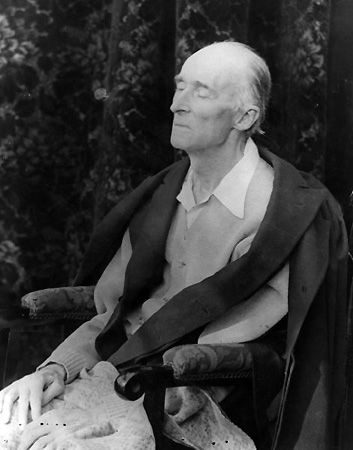
The blind, syphilitic Delius of his later years.
Source: Dutton Epoch CD (my rip!)
Format: mp3, 320k/s (CBR), DDD Stereo
File Size: 156 MB
Download Link – https://mega.co.nz/#!25JkjIIL!LS0dXVgTBNUTveLN27MS6SfjUilus9PkZeNWUfW 94LQ
Enjoy! Don’t share! Buy the original! 🙂
Thanks!
Einojuhani Rautavaara, Cantus Arcticus, etc (No.243) – much more accessible than the composer’s name suggests
http://forums.ffshrine.org/f92/wimpel69s-could-film-music-classical-corner-work-121898/16.html#post2245441
Respighi & Castelnuovo-Tedesco, Violin Concertos (No.246) – two of the loveliest VC’s of the 20th century
http://forums.ffshrine.org/f92/wimpel69s-could-film-music-classical-corner-work-121898/16.html#post2245613
M. Ohki, Symphony "Hiroshima" (No.247) – stunning symphony in commemoration of the disaster
http://forums.ffshrine.org/f92/wimpel69s-could-film-music-classical-corner-work-121898/16.html#post2246257
C???sar Franck, Psych??? etc (No.249) – lovely late romantic tone poems by a great French master
http://forums.ffshrine.org/f92/wimpel69s-could-film-music-classical-corner-work-121898/16.html#post2246332
Graeme Koehne Elevator Music (No.251) – Contemporary Australian composer with a light touch
http://forums.ffshrine.org/f92/wimpel69s-could-film-music-classical-corner-work-121898/16.html#post2246991
Aaron Copland, Grohg (No.252) – an unusually expressionistic Copland ballet, inspired by the film "Nosferatu":
http://forums.ffshrine.org/f92/wimpel69s-could-film-music-classical-corner-work-121898/16.html#post2247072
Manuel de Falla, Master Pedro’s Puppet Show, etc (No.241) – three witty ballets (Falla, Milhaud, Stravinsky):
http://forums.ffshrine.org/f92/wimpel69s-could-film-music-classical-corner-work-121898/16.html#post2244678
Leonard Bernstein, The Dybbuk, Fancy Free (No.301) – two colorful, complete ballets by Bernstein
http://forums.ffshrine.org/f92/wimpel69s-could-film-music-classical-corner-work-121898/20.html#post2281470
Hans Huber, A B???cklin Symphony (No.302) – opulent late romantic symphony by the most important Swiss composer of his time
http://forums.ffshrine.org/f92/wimpel69s-could-film-music-classical-corner-work-121898/20.html#post2282283
I’ve one question for you: do you have this disc: Nino Rota – Kremerata Musica with Gidon Kremer of the year 1997??? I’ll appreciate your answer my friend. Best regards.
Leonardo
Thank you very much for the answer, yestarday I heard the Toccata et Sarabanda pour Harpe of Rota and I felt a great fascination with this piece. Again, thanks for your atention:
Leonardo
I will
Vincent d’Indy, Po???me des Rivages (No.254) – another set of lovely impressionistic tableaus
http://forums.ffshrine.org/f92/wimpel69s-could-film-music-classical-corner-work-121898/16.html#post2247853
William Thomas McKinley, And the President Said + Morton Gould, Hosedown (No.255) – modern Americana, with a colorful ballet by Morton Gould
http://forums.ffshrine.org/f92/wimpel69s-could-film-music-classical-corner-work-121898/16.html#post2247944
Florent Schmitt, Antoine et Cl???opatre, Mirages (No.256) – beautifully crafted music by the composer of "La Trag???die de Salom???"
http://forums.ffshrine.org/f92/wimpel69s-could-film-music-classical-corner-work-121898/17.html#post2249535
Paul Hindemith, Mathis der Maler Symphony, etc (No.257) – a trio of popular neo-classical works by a leading German composer
http://forums.ffshrine.org/f92/wimpel69s-could-film-music-classical-corner-work-121898/17.html#post2249615
Paul Le Flem, Symphony, The Great Gardener of France (No.258) – a selection works, including a film score, by an underrated Belgian composer
http://forums.ffshrine.org/f92/wimpel69s-could-film-music-classical-corner-work-121898/17.html#post2249668
Mieczysław Karłowicz, Returning Waves, etc (No.259) – sumptuous late romantic tone poems by a Polish composer who died at 33
http://forums.ffshrine.org/f92/wimpel69s-could-film-music-classical-corner-work-121898/17.html#post2250117
The name of Sir Arthur Sullivan (1842-1900) is indissolubly wedded with that of
W.S. Gilbert, with whom he wrote a succession of operettas that have remained a popular
part of English national repertoire. They were for many years the sole property of the
company founded for their performance by Richard D???Oyly Carte, who later built the Savoy
Theatre in London for the performance of what became the Savoy Operas. The national
institution that Gilbert and Sullivan have become has drawn attention away from
Sullivan???s more serious work. He was knighted in 1883.
Operettas with words by Gilbert range from Trial by Jury in 1875 to The Gondoliers
in 1889, followed in 1893 by Utopia Limited and, in 1896, by the lesser-known
The Grand Duke. HMS Pinafore, The Pirates of Penzance, Patience (with its satire on Oscar
Wilde), the political satire Iolanthe, The Mikado, Ruddigore and The Yeomen of the Guard
all continue to bear witness to the deft and witty music of Sullivan and the comic verbal talents of Gilbert.
The huge and lasting success of the Gilbert & Sullivan operettas has all but eclipsed his other
works, which include symphonic poems, cantatas and oratorios, and music for the theatre.
Which is a shame, because much of the latter is very well crafted, as could be expected from
so talented a composer. Several fine examples of theatre music: Macbeth, The Merry Wives of Windsor,
King Arthur, Henry VIII, and The Merchant of Venice are featured on these albums, along
with two overtures.
Music Composed by Sir Arthur Sullivan
Played by the RT??? Concert Orchestra and Choir, Dublin
With Margaret MacDonald (mezzo-soprano) & Emmanuel Lawler (tenor)
Conducted by Andrew Penny
"It is a pleasure to welcome both of these splendidly played and
recorded discs to the catalog…"
American Record Guide
"Conductor Andrew Penny…leads both the orchestral and choral
ensembles with zest, good tempo choices, and firm baton."
Fanfare
Source: Marco Polo CDs (my rip!)
Format: mp3, 320k (CBR), DDD Stereo
Files Sizes: 119 MB / 152 MB (incl. booklets)
Disc 1 – Macbeth, etc – https://mega.co.nz/#!FJBCFIoY!BJPL-H-EvWvO9QrvJdBXew6g9D9XPdSYxwjv6AutCjM
Disc 2 – The Merchant of Venice, etc – https://mega.co.nz/#!pURG3RZR!eM0rUXFwGvcDw76osXZXXQznP_9nLhxvPU3ss99 oG8k
Enjoy! Don’t share! Buy the originals! 🙂
Mieczysław Karłowicz, Stanisław and Anna Oświecimowie (No.260) – a second collection of tone poems
http://forums.ffshrine.org/f92/wimpel69s-could-film-music-classical-corner-work-121898/17.html#post2250159
Jazeps Vitols, Orchestral Works (No.261) – program music by the leading Latvian composer
http://forums.ffshrine.org/f92/wimpel69s-could-film-music-classical-corner-work-121898/17.html#post2250676
Josef Rheinberger, Wallenstein (No.263) – 19th century triptych on the great general of the 30 Years War
http://forums.ffshrine.org/f92/wimpel69s-could-film-music-classical-corner-work-121898/17.html#post2250721
Elliot Goldenthal, Fire Water Paper (No.270) – Goldenthal’s Vietnam oratorio
http://forums.ffshrine.org/f92/wimpel69s-could-film-music-classical-corner-work-121898/18.html#post2252852
Thomas Beveridge, Yizkor Requiem (No.271) – impassioned requiem by the Jewish-American composer
http://forums.ffshrine.org/f92/wimpel69s-could-film-music-classical-corner-work-121898/18.html#post2252852
Igor Stravinsky, Oedipus Rex (No.272)
http://forums.ffshrine.org/f92/wimpel69s-could-film-music-classical-corner-work-121898/18.html#post2252852
Hmm, not a single response to the desert island discs list yet …
Re-Ups:
Louis Aubert, Cin???ma etc (No.132):
http://forums.ffshrine.org/f92/wimpel69s-could-film-music-classical-corner-work-121898/8.html#post2211220
Laurent Petitgirard, The Twelve Guards of the Temple (No.133):
http://forums.ffshrine.org/f92/wimpel69s-could-film-music-classical-corner-work-121898/8.html#post2211884
English Ballet Music (Constant Lambert, Lennox Berkeley, John Lanchbery) (No.134):
https://mega.co.nz/#!lJYxRJpT!H9ANq07UaJ8sWFd4kW3ui1nQV3R_zZF0b4hdBYF ONZ4
Alondra de la Parra, Mi Alma Mexicana (No.136):
http://forums.ffshrine.org/f92/wimpel69s-could-film-music-classical-corner-work-121898/8.html#post2212095
This is a most delightful collection of works by Claude Debussy, originally composed
for piano, orchestrated by friends and/or colleagues like Andr??? Caplet, Henri Busser and
even Maurice Ravel, with an additional arrangement by that great conductor Ernest Ansermet.
The most ambitious of these is Caplet’s version of the Children’s Corner suite, done
with the composer’s blessing (as were the Busser arrangements). It is dedicated to Debussy’s daughter,
Claude-Emma (known as "Chou-Chou"), who was three years old at the time. The piano pieces were not
intended to be played by children; rather they are meant to be evocative of childhood and some of the
toys in Claude-Emma’s toy collection. There are six pieces in the suite, each with an English-language
title. This choice of language is most likely Debussy’s nod towards Chou-Chou’s English governess.
The remaining arrangements incude Debussy’s most popular piano work, Claire de Lune (Caplet
and Stokowski), the ???pigraphes Antiques (Ansermet), the Petite Suite (Busser) and shorter
works like Pour le Piano II/2 and Danse, Tarentelle styrienne (both by Ravel).
Music Composed by Claude Debussy
Played by the Orchestre Symphonique de Qu???bec
Conducted by Yoav Talmi
"There have been recordings of miscellaneous Debussy transcriptions before, but none quite at this
level of completeness–or excellence. Caplet???s arrangement of Children???s Corner, Busser???s Petite Suite,
and the Ravel orchestrations of Sarabande and Danse are all well known; Ansermet???s exquisite scoring
of Six ???pigraphes antiques deserves to be. The program also includes Busser???s take on La Soir???e
dans Grenade, and no less than two versions of Clair de lune, by Stokowski and Caplet respectively.
The former, not surprisingly, has the greater degree of sheer sensuous magic, while the latter is a
touch more austere, but not necessarily more respectful of the original.
Yoav Talmi and the Qu???bec Symphony Orchestra offer performances that routinely rise to the level
of perfection. Note the ideal tempo in the Ballet finale to the Petite Suite, or the deft touches of humor
in Golliwog???s Cakewalk (and those double-basses in Jimbo???s Lullaby, "doux mais un peu gauche",
exactly as Caplet prescribes). It???s all just marvelous, plain and simple. Gorgeously atmospheric
engineering, in both SACD surround and regular stereo formats, makes the entire package absolutely
irresistible. If you love Debussy, then you need to add this release to your collection."
Classics Today http://i1084.photobucket.com/albums/j415/wimpel69/p10s10_zps455b1f8d.gif

Andr??? Caplet (left) and Claude Debussy
Source: ATMA Classique CD (my rip!)
Format: mp3, 320k/s (CBR), DDD Stereo
File Size: 211 MB (incl. cover)
Download Link – https://mega.co.nz/#!cEoE0b6Q!Vc8s8HU9bO3Ws0ZMHnv-91MD301LHOGxwcO3hlcGy0Q
Enjoy! Don’t share! Buy the original! 🙂
Stokowski ‘Symphony’ – Premiere Broadcast – YouTube (http://www.youtube.com/watch?v=wXr2R5OsMh0)
Stokowski ‘Reverie’ – The Conductor Composes – YouTube (http://www.youtube.com/watch?v=3L2WslT1gZE)
Andr??? Caplet, Le Miroir de J???sus (No.273) – fantastic French cantata
http://forums.ffshrine.org/f92/wimpel69s-could-film-music-classical-corner-work-121898/18.html#post2252852
Kallervo Tuukanen, Sea Symphony (No.274) – colorful, expressive symphonic seascapes
http://forums.ffshrine.org/f92/wimpel69s-could-film-music-classical-corner-work-121898/18.html#post2253763
Aldo Finzi, Inna alla Notte, Il Salmo (No.275) – two substantial works by a forgotten Italian composer
http://forums.ffshrine.org/f92/wimpel69s-could-film-music-classical-corner-work-121898/18.html#post2253810
Johan De Meij, The Lord of the Rings Symphony (No.277) – popular work after Tolkien, originally for band, heard here with full orchestra
http://forums.ffshrine.org/f92/wimpel69s-could-film-music-classical-corner-work-121898/18.html#post2254653
Elizabethan Serenade, Jamaican Rumba, etc (No.279) – a collection of some of the most popular British Light Music works
http://forums.ffshrine.org/f92/wimpel69s-could-film-music-classical-corner-work-121898/18.html#post2260863
George Templeton Strong, Die Nacht, Le Roi Arthur (No.280) – two extended symphonic poems in a Germanic late romantic style
http://forums.ffshrine.org/f92/wimpel69s-could-film-music-classical-corner-work-121898/18.html#post2260933
Michael Easton, Concerto on Australian Themes, Beasts of the Bush, etc (No.281) – light, bright contemporary Australian works
http://forums.ffshrine.org/f92/wimpel69s-could-film-music-classical-corner-work-121898/18.html#post2261062
Dave Heath, African Sunrise, etc (No.282) – exciting music for percussion and orchestra, played by Evelyn Glennie
http://forums.ffshrine.org/f92/wimpel69s-could-film-music-classical-corner-work-121898/18.html#post2261766
Dare we hope for his Emerald Island?
Astor Piazzolla, Sinfonia Buenos Aires, Bandoneon Concerto (No.285) – characteristic works by the master of Argentinian "new tango"
http://forums.ffshrine.org/f92/wimpel69s-could-film-music-classical-corner-work-121898/19.html#post2262531
Rodion Shchedrin, Carmen Suite (No.286) – colorful re-imagining of Bizet’s most famous work
http://forums.ffshrine.org/f92/wimpel69s-could-film-music-classical-corner-work-121898/19.html#post2262784
Felix Mendelssohn, A Midsummer Night’s Dream (No.287) – incidental music to the Shakespeare play, including the famous "Overture"
http://forums.ffshrine.org/f92/wimpel69s-could-film-music-classical-corner-work-121898/19.html#post2262784
Francisco Escudero, Illeta (No.288) – stark, striking contemporary Spanish oratorio
http://forums.ffshrine.org/f92/wimpel69s-could-film-music-classical-corner-work-121898/19.html#post2262784
Alan Hovhaness, Symphonies Nos. 2, 50 & 66 (No.289) – three of Hovhaness’ most beautiful mountain-themed works, lovingly played by the Liverpudlians
http://forums.ffshrine.org/f92/wimpel69s-could-film-music-classical-corner-work-121898/19.html#post2263316
Bohuslav Martinu, Suites from the Operas (No.290)- colorful suites drawn from some of Martinu’s lesser-known operatic works
http://forums.ffshrine.org/f92/wimpel69s-could-film-music-classical-corner-work-121898/19.html#post2263432
Richard Strauss, An Alpine Symphony (No.291) – one of the glories of program music, pure film music
http://forums.ffshrine.org/f92/wimpel69s-could-film-music-classical-corner-work-121898/19.html#post2263498
———- Post added at 09:39 AM ———- Previous post was at 08:57 AM ———-
No.381
A rare glimpse into the world of late 20th century "Western" classical works by composers from
the former crown colony of Hong Kong. Six composers are featured with shorter orchestral works
(between 4 and 17 minutes) here; their styles are very diverse, from conservative, Bart???k-driven
symphonic dances to advanced atonal European influences, sometimes with authentic Chinese elements
in the mix. Very good performances and superb recorded sound from a label that at the end of the
1990s promised to become a major force in presenting classical music from China, Hugo Records.
David Gwilt (as you may have guessed) is the only gwailo featured in this collection.
So Ting Cheong -Towards the Superior
Clarence Mak – Illimitable Heaven
Chung Yiu-Kwong – Under the Red Eaves
David Gwilt – Dances for Orchestra
Victor Chan – Hsien
Lam Shun – Saytankarxi
Played by the Hong Kong Sinfonietta
Conducted by Yip Wing-Sie
"Founded in 1990 by a group of local musicians with a mission to bring music closer to the community,
the Hong Kong Sinfonietta (香港小交響樂團) today is an orchestra which has a full season with 56 contract
musicians and a full-time management.
Re-organised in 1999, the orchestra appointed Tsung Yeh as its Music Director. In April 2002, renowned
conductor Yip Wing-sie joined as the new Music Director, and the Hong Kong Sinfonietta continues with
its mission, adding to its vision of "investing in a cultural tomorrow" – thus providing a platform for
musical talents.
Since 1999, the Hong Kong Sinfonietta has collaborated with an illustrious array of international
musicians and groups, including Vladimir Ashkenazy, Augustin Dumay, Fou Ts’ong, Christopher Hogwood,
Luciano Pavarotti, Pinchas Zukerman etc. The orchestra has also been regularly on the participant list
of all the major festivals in Hong Kong including the Hong Kong Arts Festival, Le French May, and festivals
presented by the Hong Kong Government. As an evid believer of keeping music alive and comtemporary,
the Hong Kong Sinfonietta was also the orchestra for many years for the local contemporary music
festival Musicarama.
On tour, the Hong Kong Sinfonietta became the first Asian orchestra to be invited by the Saint-Riquier
Festival to perform in the medieval town in northern France in 2001. In 2004, the orchestra returned
to the Festival, as well as to the Fl??neries Musicales d’Et?� de Reims, as part of the Year of China
in France. In August 2005, the orchestra was invited to two Lithuanian Festivals and was also the first
Chinese orchestra to perform at the National Philharmonic Hall in Warsaw. In May 2006, the Hong Kong
Sinfonietta was invited to join the biggest Mozart Festival in the world in Tokyo, playing six concerts
at La Folle Journ?�e Festival. The Orchestra returned to the Festival in 2007, playing six concerts
under the theme of "Harmony of People". It also made its d?�but at the 2007 Shanghai Spring
International Music Festival.
At home, the orchestra performs year round, mostly at the Hong Kong City Hall Concert Hall.
In 2006, it performed over 70 times with local and international soloists and groups such as the
Hong Kong Ballet and Opera Hong Kong. Apart from standard orchestral repertoire, the Hong Kong
Sinfonietta commissions new works every year and also ventures into crossover concerts with
other art forms. It also boasts a rich Chinese orchestral repertoire which few orchestras in the world
can rival with, mostly recorded on the HUGO label.
On the educational front, Hong Kong Sinfonietta pioneered specially-designed "educational" concerts
for different age groups. New concepts on the Hong Kong concert stage: HKS for Kids (for children),
Short-cut to Classical Music and Know Your Classical Music (for adults) have, since their inception
in 2000, provided a new realm in "audience development"."
Source: Hugo CD (my rip!)
Format: mp3, 320k/s (CBR), DDD Stereo
File Size: 170 MB
Download Link – https://mega.co.nz/#!UNg12bya!FVezxCSiWEnVaWPGpjmKUSZjezgmaMVzqp_trZy uu3U
Enjoy! Don’t share! Buy the original! 🙂
http://forums.ffshrine.org/f92/wimpel69s-could-film-music-classical-corner-work-121898/19.html#post2263498
This is .CUE sheet for the recording
REM TITLE "Eine Alpensinfonie, op.64"
REM ARTIST "Strauss"
REM PERFORMER "Wiener Philharmoniker, Andr??? Previn"
REM CONDUCTOR "Andre Previn"
REM DATE 1990
REM Genre classical
FILE "01 – Strauss – Eine Alpensinfonie, op.64.mp3" MP3
TRACK 01 AUDIO
TITLE "Nacht"
INDEX 01 00:00:00
TRACK 02 AUDIO
TITLE "Sonnenaufgang"
INDEX 01 03:31:00
TRACK 03 AUDIO
TITLE "Der Anstieg"
INDEX 01 04:58:00
TRACK 04 AUDIO
TITLE "Eintritt In Den Wald"
INDEX 01 07:20:00
TRACK 05 AUDIO
TITLE "Wanderung neben dem Bache"
INDEX 01 12:38:00
TRACK 06 AUDIO
TITLE "Am Wasserfall"
INDEX 01 13:23:00
TRACK 07 AUDIO
TITLE "Erscheinung"
INDEX 01 13:38:00
TRACK 08 AUDIO
TITLE "Auf blumigen Wiesen"
INDEX 01 14:24:00
TRACK 09 AUDIO
TITLE "Auf der Alm"
INDEX 01 15:20:00
TRACK 10 AUDIO
TITLE "Durch Dickicht und Gestrupp auf Irrwegen"
INDEX 01 17:53:00
TRACK 11 AUDIO
TITLE "Auf dem Gletscher"
INDEX 01 19:20:00
TRACK 12 AUDIO
TITLE "Gefahrvolle Augenblicke"
INDEX 01 20:16:00
TRACK 13 AUDIO
TITLE "Auf dem Gipfel"
INDEX 01 21:37:00
TRACK 14 AUDIO
TITLE "Vision"
INDEX 01 26:05:00
TRACK 15 AUDIO
TITLE "Nebel steigen auf"
INDEX 01 29:00:00
TRACK 16 AUDIO
TITLE "Die Sonne verdustert sich allmahlich"
INDEX 01 29:18:00
TRACK 17 AUDIO
TITLE "Elegie"
INDEX 01 30:03:00
TRACK 18 AUDIO
TITLE "Stille vor dem Sturm"
INDEX 01 31:47:00
TRACK 19 AUDIO
TITLE "Gwitter und Sturm; Abstieg"
INDEX 01 34:34:00
TRACK 20 AUDIO
TITLE "Sonnenuntergang"
INDEX 01 38:20:00
TRACK 21 AUDIO
TITLE "Ausklang"
INDEX 01 40:37:00
TRACK 22 AUDIO
TITLE "Nacht"
INDEX 01 46:15:00
Leos Jan???cek: Taras Bulba, Sinfonietta, Violin Concerto (No.293) – the leading Czech composer after Dvor???k
http://forums.ffshrine.org/f92/wimpel69s-could-film-music-classical-corner-work-121898/19.html#post2264943
Malcolm Williamson, Our Man in Havana Suite, etc (No.294) – works by the former Master of the Queen’s Music(ke)
http://forums.ffshrine.org/f92/wimpel69s-could-film-music-classical-corner-work-121898/19.html#post2264984
Anthony Louis Scarmolin, Orchestral Works (No.295) – neo romantic program music by a forgotten American composer
http://forums.ffshrine.org/f92/wimpel69s-could-film-music-classical-corner-work-121898/19.html#post2266588
Louis Gruenberg, Symphony No.2, etc (No.296) – imaginative symphony and program suite by the America concert and film composer ("Commandos Strike at Dawn")
http://forums.ffshrine.org/f92/wimpel69s-could-film-music-classical-corner-work-121898/19.html#post2266588
Bright Sheng, The Phoenix etc (No.297) – successful Asian-American composer whose music is shaped by two cultures
http://forums.ffshrine.org/f92/wimpel69s-could-film-music-classical-corner-work-121898/19.html#post2267273
William Walton, The Quest, The Wise Virgins (No.299) – two ballets by the popular English concert and film composer ("Hamlet", "Henry V", "Richard III")
http://forums.ffshrine.org/f92/wimpel69s-could-film-music-classical-corner-work-121898/19.html#post2268054
The Wooden Prince (A f???b???l faragott kir???lyfi) is a one-act pantomime ballet composed by B???la Bart???k
in 1914-1916 (orchestrated 1916-1917) to a scenario by B???la Bal???zs. It was first performed at the Budapest Opera
on 12 May 1917 under the conductor Egisto Tango.While the ballet has never achieved the fame of Bart???k’s
The Miraculous Mandarin (1926, which can be foud earlier in this thread), but it was enough of a success
at its premiere to prompt the Opera House to stage Bart???k’s opera, Bluebeard’s Castle the following year
(it had been waiting for a performance since 1911). Like Bluebeard, The Wooden Prince uses a huge orchestra
(it even includes saxophones), though the critic Paul Griffiths believes it sounds like an earlier work in style
(Griffiths p.71). The music shows the influence of Debussy and Richard Strauss, as well as Wagner
(the introduction echoes the prelude of Das Rheingold). Bart???k used a scenario by the poet B???la Bal???zs,
which had appeared in the influential literary journal Nyugat in 1912.
The plot concerns a prince who falls in love with a princess, but is stopped from reaching her by a fairy who
makes a forest and a stream rise against him. To attract the princess’ attention, the prince hangs his cloak
on a staff and fixes a crown and locks of his hair to it. The princess catches sight of this "wooden prince" and
comes to dance with it. The fairy brings the wooden prince to life and the princess goes away with that instead
of the real prince, who falls into despair. The fairy takes pity on him as he sleeps, dresses him in finery and
reduces the wooden prince to lifelessness again. The princess returns and is finally united with the human prince.
The second work featured here is Bartok’s most popular and enduring success (not necessarily his greatest work!),
the Concerto for Orchestra – which was the last piece the composer was able to finish before his untimely death
(his Piano Concerto No.3 and the Viola Concerto were both completed by Tibor Serly). It is cast in
a neo-classical style, much more poised and mellow compared to his earlier, more rugged and percussive works.
Music Composed by B???la Bart???k
Played by the SWR Sinfonieorchester Baden-Baden und Freiburg
Conducted by Michael Gielen
"Early in 2006, H???nssler released a splendid CD featuring B???la Bart???k’s Four Pieces for Orchestra, the
Violin Concerto No. 1, and the Music for strings, percussion, and celesta, all conducted with great vitality
and acuity by Michael Gielen and played with exceptional brilliance by the SWR Sinfonieorchester Baden-
Baden und Freiburg. Later in the year, the label produced a follow-up album, this time featuring Bart???k’s
suite from the ballet The Wooden Prince, Sz. 60 (1917), and the Concerto for Orchestra, Sz. 116 (1943),
and the success of the first album was resoundingly matched. The shimmering rendition of The Wooden
Prince makes a marvelous opening for the program, for its magical atmosphere and glistening impressionistic
touches prepare the listener for the evocative music of the concerto, and the two works are comparable
in their textural clarity, tonal accessibility, and tunefulness. Gielen is a master at bringing out an orchestra’s
purest timbres, and his work here is some of the most colorful he has ever produced. The concerto
especially benefits from Gielen’s vivid highlights, since it sometimes can seem thick and heavy under a
less exacting conductor. Additionally, Gielen’s interpretation of the concerto is emphatically virtuosic,
rather than symphonic in character, so the heightened colors are at the service of Bart???k’s technical
wizardry and make the piece sound as dazzling and vibrant as it was intended to be. Furthermore, H???nssler’s
reproduction is astonishingly clear and crisp, so scarcely a note is lost, and the recording is imbued with a
credible ensemble presence and glorious resonance."
All Music
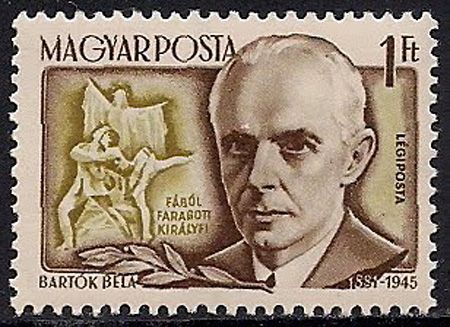
Hungarian stamp commemorating "The Wooden Prince"
Source: H???nssler CD (my rip!)
Format: mp3, 320k/s (CBR), DDD Stereo
File Size: 148 MB (incl. cover)
Download Link – https://mega.co.nz/#!0cAH3IgA!S-5f62Ql3y8px36DZiu4jAuybtoJ9bpuWCjlFmOYOTo
Enjoy! Don’t share! Buy the original! 🙂
Re-Ups:
George W. Chadwick, Cleopatra, Sinfonietta, etc (No.300) – symphonic poems by the leading composer of the ate 19th century "New England Group"
http://forums.ffshrine.org/f92/wimpel69s-could-film-music-classical-corner-work-121898/20.html#post2268804
Erkki Melartin, Violin Concerto, Sleeping Beauty Suite (No.305) – charming, sweeping Finnish late romanticism
http://forums.ffshrine.org/f92/wimpel69s-could-film-music-classical-corner-work-121898/20.html#post2284741
Ch???vez, Ponce, Revueltas – Shorter Orchestral Works (No.306) – another round of colorful Mexican works
http://forums.ffshrine.org/f92/wimpel69s-could-film-music-classical-corner-work-121898/21.html#post2286497
William Russo, Street Music (No.308) – jazz-infused American music
http://forums.ffshrine.org/f92/wimpel69s-could-film-music-classical-corner-work-121898/21.html#post2287519
Alexander Moyzes, Gemer Dances, Down the River Vah (No.309) – leading Slovak composer of the 20th century
http://forums.ffshrine.org/f92/wimpel69s-could-film-music-classical-corner-work-121898/21.html#post2289389
Alfredo Casella, Italia (No.311) – extended symphonic poem by Casela + charming ballet suite by Respighi
http://forums.ffshrine.org/f92/wimpel69s-could-film-music-classical-corner-work-121898/21.html#post2289389
———- Post added at 09:36 AM ———- Previous post was at 08:52 AM ———-
No.383
Mark Adamo (*1962) first attracted national attention with the libretto and score to his
uniquely successful d???but opera, Little Women, after the novel by Louisa May Alcott.
Introduced by Houston Grand Opera in 1998 and revived there in 2000, Little Women
has since enjoyed over sixty national and international engagements in cities ranging from
New York to Minneapolis, Toronto, Chicago, San Francisco, Adelaide, Mexico City, Tokyo,
and the recent European premiere in Brugges, Belgium (2009) and the Canadian premiere
in 2010 in Calgary and Banff. It is one of the most frequently performed North American operas
of the last decade. Telecast by PBS/WNET on Great Performances in 2001 and released on CD
by Ondine that same year, in autumn 2010 Naxos releases the DVD of Little Women???s
2001 broadcast. Comparable acclaim greeted the premiere of Lysistrata, or the
Nude Goddess, adapted from Aristophanes??? comedy but including elements from Sophocles???
Antigone. Lysistrata was commissioned by Houston Grand Opera for its 50th anniversary
and premiered in March 2005 with additional performances at New York City Opera in 2006.
Adamo???s first concerto, Four Angels: Concerto for Harp and Orchestra, was commissioned
by the National Symphony Orchestra and introduced in June 2007. Adamo is currently at work
on his next opera, commissioned by San Francisco Opera for premiere in 2013.
Music Composed by Mark Adamo
Played by the Eclipse Chamber Orchestra
With Emily Pulley (soprano), Andrew Sullivan (narrator)
And Dotian Levalier (harp)
Conducted by Sylvia Alimena
"Composer Mark Adamo is best known for his work as an opera composer,
and by the release date of Naxos’ Mark Adamo: Late Victorians, he has composed
two of them: Little Women (1998) and Lysistrata, or the Nude Goddess (2005).
Operas take a long time to compose and are expensive to record well, and when you
devote a lot of time to a single, focused work it can be hard to accumulate the little
things you need in order to produce a single CD that affords listeners a sample of
what you can do. The title work, Late Victorians (1994, but heard in a revised version),
is one of those comparatively little things, a symphonic cantata with a text cobbled
together from an essay included in Richard Rodriguez’s Pulitzer Prize-nominated book
Days of Obligation — a book where Rodriguez controversially came out as gay —
and select poems of Emily Dickinson. The Rodriguez text concerns late Victorian
houses in San Francisco, lately rehabbed, but then left vacant as their owners struggled
and died with the AIDS virus. Unable to set the long, fully narrative Rodriguez text,
Adamo decided to assign some passages from it to a narrator; here read by actor/
author Andrew Sullivan, and to alternate them with Dickinson’s poems as sung by
a soprano, that part taken here by Emily Pulley. Although it deals with AIDS, Late
Victorians is neither anguished nor angry; it is quite low key and requires some
amount of patience owing to the lengthy cadenzas awarded to solo instruments
in the orchestra. Late Victorians is certainly not a typical cantata as the presence
of words is not continuous and the dialogue-like exchange between the speaker
and singer is highly unconventional. When the soprano first comes in, you almost
want to laugh, but ultimately it sounds natural and you grow used to it. The total
output of the music and words, however, is very effective: this piece captures the
feeling of empty ambiguity analogous to a scenario such as "I had a friend, and
he died. I didn’t find out about it until 18 months later…." This is a condition not
imposed by the disease, but arises as an external circumstance of it. This has
affected countless survivors of AIDS victims whether gay or straight, and Adamo
has found the right voice for the situation in Late Victorians.
Apart from Regina Coeli, a single movement from Adamo’s Concerto for harp
and orchestra featuring soloist Dotian Levalier (2006), the rest of the music consists
of "bleeding chunks" from Adamo’s operas; the Overture to Lysistrata and a concert
suite drawn in 2007 from Little Women entitled Alcott Music. It is in the latter that one
can most readily understand what is so immediate and likable about Adamo’s operatic
work; it captures the nineteenth-century milieu of Louisa May Alcott without the built-in
sentimentality associated with the era and is stated in a completely contemporary neo-
Romantic idiom. Regina Coeli — and presumably the concerto to which it is related —
seems like a nice addition to the all too slim repertoire of concertos for the harp; however,
it isn’t as strong as the other instrumental music here, being a little reminiscent of Ned
Rorem’s concerted works, though it is admittedly more studiously wrought and tasteful
than Rorem typically is outside of his song literature and piano music.
Sylvia Alimena and the Eclipse Chamber Orchestra plays Adamo’s music with considerable
warmth and the right interpretive idiom; they sound much more confident and assured
on Late Victorians than they do on their recording of overtures of Florian Leopold Gassmann,
issued by Naxos in the same calendar month. Since serious awareness of gay classical
composers began to be recognized in the 1990s, a sort of potted and slightly condescending
patina of preconceived notions has grown up around what a gay composer does and is.
Such notions include a tendency toward unfashionably tonal and neo-Romantic harmonic
language, a preference toward vocal music or music written for the stage and a seeming
over-concern for issues impacting the gay community, including AIDS; though on the other
hand, one wonders how you would be expected to ignore it? Adamo’s Late Victorians isn’t
likely to dispel such preconceived notions, but for music that can be placed roughly within
those parameters this is certainly top drawer and deserves a wider hearing well beyond
the confines of the gay community."
All Music
Source: Naxos CD (my rip!)
Format: mp3, 320k/s (CBR), DDD Stereo
File Size: 133 MB (incl. cover, booklet)
Download Link – https://mega.co.nz/#!wAIUGATI!QiVyJzS0bb3zhaqTkdwFKU7Duu4hnEJAtJ8qp4M uEm0
Enjoy! Don’t share! Buy the original! 🙂
Bedrich Smetana, Ma Vlast (My Fatherland) (No.198) – beautifully idiomatic recording of Smetana’s masterpiece
http://forums.ffshrine.org/f92/wimpel69s-could-film-music-classical-corner-work-121898/13.html#post2225714
Modest Mussorgsky, Pictures at an Exhibition (No.199) – three versions: a wonderful reading of Ravel’s famous orchestration, one for brass band, and one for cellos & double basses alone!
http://forums.ffshrine.org/f92/wimpel69s-could-film-music-classical-corner-work-121898/13.html#post2225762
Gustav Holst, The Planets (No.200) – superb recording of the Holst classic, plus a hilarious Petrouchka pastiche by Percy Grainger
http://forums.ffshrine.org/f92/wimpel69s-could-film-music-classical-corner-work-121898/13.html#post2226398
Gustav Holst, The Planets for Two Pianos (No.200) – Holst’s original version!
http://forums.ffshrine.org/f92/wimpel69s-could-film-music-classical-corner-work-121898/13.html#post2226398
Richard Arnell, Punch and the Child, etc (No.201) – two colorful ballets and a violin concerto by neglected English composer Arnell
http://forums.ffshrine.org/f92/wimpel69s-could-film-music-classical-corner-work-121898/13.html#post2226589
William Wallace, Creation Symphony (No.202) – ripe late-romanticism from Britain
http://forums.ffshrine.org/f92/wimpel69s-could-film-music-classical-corner-work-121898/13.html#post2226589
Igor Markevitch, R???bus, etc (No.321) – Markevitch’s masterful ballet
http://forums.ffshrine.org/f92/wimpel69s-could-film-music-classical-corner-work-121898/21.html#post2305960
Pierre-Octave Ferroud, Chirurgie Suite, Symphony (No.322) – a forgotten French composer
http://forums.ffshrine.org/f92/wimpel69s-could-film-music-classical-corner-work-121898/21.html#post2308845
John Fernstr???m Symphony 6, The Capricious Troubadour (No.323) – a Swedish master of the mid 20-th century
http://forums.ffshrine.org/f92/wimpel69s-could-film-music-classical-corner-work-121898/22.html#post2309617
Emerging on the international music scene in the late ’40s, Alberto Ginastera (1916-1983)
established himself as one of the mid-twentieth century’s most distinctive compositional figures.
Although he eventually borrowed sonorities and procedures from the serialist and experimentalist
movements of the ensuing decades, he did so selectively and undogmatically, synthesizing with
ever-increasing sophistication and discretion the echoes of his native Argentina with the expanding
compositional palette of the avant-garde.
Ginastera worked actively as a composer and champion of new music despite considerable
external obstacles; his political views twice put him at odds with the Per???n government, which
forced his resignation from positions at the National Military Academy and the National University
of La Plata (he regained the latter position after Per???n’s defeat). Personal problems, including
marital strife, stifled his productivity in the late ’60s, but his divorce and subsequent marriage
to cellist Aurora Natola, and his retirement to Switzerland after decades of teaching in Argentina’s
most prominent musical institutions, gave Ginastera his second wind; his last years were among
his most fruitful.
This collection, recorded in Denmark(!) under Venezuelan conductor Jan Wagner, brings together
some of Ginastera’s most approachable and colorful works from the early and middle periods in
his career.
Music Composed by Alberto Ginastera
Played by the Odense Symphony Orchestra
Conducted by Jan Wagner
"Following up on their superb Villa-Lobos CD, Venezuelan conductor Jan Wagner
and his fine Odense orchestra turn their attention to Ginastera, producing at a stroke
the single most recommendable introduction to that composer???s orchestral music.
Most of the best-known and popular of the composer???s tonal, Nationalist works have
been gathered here in one convenient package (only the early ballet Panambi lacks
representation). As with the Villa-Lobos disc, there???s no questioning the conviction
and idiomatic flair with which these performers attack these colorful and intoxicating
pieces.
Wagner tends to prefer moderate tempos but never stints on giving the music the
necessary rhythmic kick. This means that the Overture to the Creole Faust has
more gravitas than usual, the Danza del trigo in Estancia greater poetry, and the
outer movements of Pampeana No. 3 additional lyrical sweep and intensity. In the
faster movements, such as Los guerreros on Ollantay or the irresistible final
Malambo from Estancia, Wagner catches appealing details of instrumental color
that other performances miss (the xylophone glissandos in the latter, for example).
Toss in excellent sound, brilliant and alive but with plenty of depth, and you won???t
find a better planned, played, or recorded Ginastera collection anywhere."
Classics Today http://i1084.photobucket.com/albums/j415/wimpel69/p10s10_zps455b1f8d.gif
Source: Bridge CD (my rip!)
Format: mp3, 320k (CBR), DDD Stereo
File Size: 131 MB
Download Link – https://mega.co.nz/#!9RgxXYKS!T_gLcTpHRWm-tS9Wn9uS2Xqw_Us0_Cpmh_n78qqRHzY
Enjoy! Don’t share! Buy the original! 🙂
Florent Schmitt, La Trag???die de Salom??? (Suite), Le Palais Hant??? (No.84) – Schmitt’s masterpieces
http://forums.ffshrine.org/f92/wimpel69s-could-film-music-classical-corner-work-121898/6.html#post2199456
Albert Roussel, Bacchus et Ariane (No.85) – Roussel’s wonderful ballet, complete
http://forums.ffshrine.org/f92/wimpel69s-could-film-music-classical-corner-work-121898/6.html#post2199650
Alan Rawsthorne, Practical Cats, etc (No.87) – charming ballet by the English composer, plus other works
http://forums.ffshrine.org/f92/wimpel69s-could-film-music-classical-corner-work-121898/6.html#post2200121
Jes???s Guridi, Sinfonia Pirenaica (No.88) – large-scale folkloristic Basque program symphony
http://forums.ffshrine.org/f92/wimpel69s-could-film-music-classical-corner-work-121898/6.html#post2200121
Sergei Prokofiev, The Steel Dance, On the Dnieper (No.88) – two rather different ballets, one "machine music", the other more folksy
http://forums.ffshrine.org/f92/wimpel69s-could-film-music-classical-corner-work-121898/6.html#post2200196
Isaac Schwartz, Yellow Stars (No.90) – a moving tribute to the Jewish suffering under the Nazis
http://forums.ffshrine.org/f92/wimpel69s-could-film-music-classical-corner-work-121898/6.html#post2200215
Douglas Lilburn, A Song of Islands, Aotearoa Overture, etc (No.91) – beautiful overtures and tone poems by New Zealand’s pre-eminent 20th century composer – very Sibelian
http://forums.ffshrine.org/f92/wimpel69s-could-film-music-classical-corner-work-121898/6.html#post2200473
Alb???ric Magnard, Hymne ??? la Justice, etc (No.95) – shorter orchestral works by French Wagnerian Alb???ric Magnard
http://forums.ffshrine.org/f92/wimpel69s-could-film-music-classical-corner-work-121898/6.html#post2200801
Toivo Kuula, Orchestral & Vocal Works (No.96) – superb pieces by an unjustly neglected Finnish composer
http://forums.ffshrine.org/f92/wimpel69s-could-film-music-classical-corner-work-121898/6.html#post2201213
Ruud Langgaard, Symphony No.1 (Clippenpastoraler) (No.97) – majestic program symphony by the Danish eccentric
http://forums.ffshrine.org/f92/wimpel69s-could-film-music-classical-corner-work-121898/6.html#post2205601
Arnold Rosner, A Sephardic Rhapsody, The Tragedy of Jane (No.99) – works by a "regional" American-Jewish composer, not unlike the music of Ernest Bloch
http://forums.ffshrine.org/f92/wimpel69s-could-film-music-classical-corner-work-121898/6.html#post2205687
———- Post added at 10:13 AM ———- Previous post was at 09:37 AM ———-
No.385
In 1942 poet Allen Curnow and composer Douglas Lilburn were living in Christchurch.
They were part of a lively circle of artists, musicians, writers, poets and academics who were to
have a major influence on the cultural development of New Zealand. Together Curnow and Lilburn
producecd a New Zealand classic Landfall in Unknown Seas, the poem by Curnow narrated
with incidental music by Lilburn. In this recording, the narrator is Sir Edmund Hillary, the first man
to have conquered Mt. Everest. This is an excerpt from the the poem:
"Simply by sailing in a new direction
You could enlarge the world.
You picked your captain,
Keen on discoveries, tough enough to make them,
Whatever vessels could be spared from other
More urgent service for a year’s adventure;
Took stock of the more probable conjectures
About the Unknown to be traversed, all
Guesses at golden coasts and tales of monsters
To be digested into plain instructions
For likely and unlikely situations.
All this resolved and done, you launched the whole
On a fine morning, the best time of year,
Skies widening and the oceanic furies
Subdued by summer illumination; time
To go and be gazed at going
On a fine morning, in the Name of God
Into the nameless waters of the world."
The other works featured on this CD include Lilburn’s Divertimento for Strings,
a neo-classical piece, plus two shorter works for strings by fellow New Zealand
composers Anthony Watson and Larry Pruden.
Music by Douglas Lilburn, Anthony Watson & Larry Pruden
Played by the New Zealand Chamber Orchestra
With Sir Edmund Hillary (narrator)
Conducted by Donald Armstrong
"Douglas Gordon Lilburn (born Wanganui, 2 November 1915; died Wellington, 6 June 2001)
Douglas Lilburn was born in Wanganui, New Zealand, in 1915. He attended Waitaki Boys’
High School from 1930 to 1933, before moving to Christchurch to study at Canterbury
University College (1934-6). In 1937 he began studying at the Royal College of Music, London.
He was tutored in composition by Ralph Vaughan Williams and remained at the College until 1939.
He returned to New Zealand in 1940 and was guest conductor in Wellington for three months
with the NBS String Orchestra. He shifted to Christchurch in 1941 and worked as a freelance
composer and teacher until 1947. Between 1946 and 1949 and again in 1951, Lilburn was
Composer-in-Residence at the Cambridge Summer Music Schools.
In 1947 Douglas Lilburn shifted to Wellington to take up a position at Victoria University as
part-time tutor in music. He was appointed full-time Lecturer in 1949 and Senior Lecturer in
1955. In 1963 he was made Associate Professor of Music and was appointed Professor with
a personal chair in Music in 1970. In 1966 Lilburn founded the Electronic Music Studio at
the university and was its Director until 1979, a year before his retirement. Lilburn was
awarded an Honorary Doctorate from the University of Otago in 1969 and in 1978 was
presented with the Composers’ Association of New Zealand (CANZ) Citation for Services to
New Zealand Music. In 1988 he was awarded the Order of New Zealand.
Prizes and Scholarships include: Percy Grainger Competition, 1936, for his tone poem
‘Forest’; Cobbett Prize, Royal College of Music, 1939 for ‘Phantasy for String Quartet’; Foli
Scholarship and Hubert Parry Prize, Royal College of Music, 1939; three out of four of the
prizes in the New Zealand National Centennial Music Celebrations Competitions, 1940; the
Philip Neill Memorial Prize 1944. Douglas Lilburn was founder of Waiteata Press Music
Editions in 1967 and founder of the Lilburn Trust of the Alexander Turnbull Library, Wellington,
1984. His writings include ‘A search for tradition’, a talk given at the first Cambridge Summer
School of Music in January 1946 (Alexander Turnbull Library, Wellington 1984) and ‘A search
for language’, a University of Otago Open Lecture, March 1969 (Alexander Turnbull Library, 1985).
Douglas Lilburn, described as "the elder statesman of New Zealand music" and the "grandfather
of New Zealand music," died peacefully at his home in Wellington on 6 June 2001."
Source: Koch International CD (my rip!)
Format: mp3, 320k/s (CBR), DDD Stereo
File Size: 138 MB
Download Link – https://mega.co.nz/#!AAATwAbB!ajujiFSXcKIf8oiRUKYhJBLJmfZAkGU3L87-OC5jAfg
Enjoy! Don’t share! Buy the original! 🙂
Lord Berners, The Triumph of Neptune, Les Sir???nes, Wedding Banquet, etc (No.100) – a trio of CDs with charming ballet music by the English eccentric
http://forums.ffshrine.org/f92/wimpel69s-could-film-music-classical-corner-work-121898/7.html#post2205761
Lodewijk Mortelmans, A Homeric Symphony, Morning Mood (No.102) – impressive epic symphony by the Belgian composer
http://forums.ffshrine.org/f92/wimpel69s-could-film-music-classical-corner-work-121898/7.html#post2205975
Mikolajus Ciurlionis, The Sea, The Forest, Preludes (No.105) – tone poems by a Lithuanian composer
http://forums.ffshrine.org/f92/wimpel69s-could-film-music-classical-corner-work-121898/7.html#post2206481
Paul Reade, Far from the Madding Crowd (No.106) – substantial English ballet
http://forums.ffshrine.org/f92/wimpel69s-could-film-music-classical-corner-work-121898/7.html#post2207103
Robert Ward, Violin Concerto, The Scarlet Letter (No.107) – Pulitzer Prize-winning composer from North Carolina
http://forums.ffshrine.org/f92/wimpel69s-could-film-music-classical-corner-work-121898/7.html#post2207162
Malcolm Arnold, Overtures (No.108) – a must for film music fans: diverting, colorful overtures by leading mid 20th-century composer
http://forums.ffshrine.org/f92/wimpel69s-could-film-music-classical-corner-work-121898/7.html#post2207234
Carl Nielsen, Helios Overture, An Imaginary Journey to the F???r???er Islands (No.109) – shorter orchestral works by the greatest 20th century Danish composer
http://forums.ffshrine.org/f92/wimpel69s-could-film-music-classical-corner-work-121898/7.html#post2207271
Romeo Cascarino, Orchestral Works (No.111) – amiable neo romantic music by an American part-time composer
http://forums.ffshrine.org/f92/wimpel69s-could-film-music-classical-corner-work-121898/7.html#post2207928
Modest Mussorgsky, Pictures at an Exhibition (No.199) – three versions: a wonderful reading of Ravel’s famous orchestration, one for brass band, and one for cellos & double basses alone!
http://forums.ffshrine.org/f92/wimpel69s-could-film-music-classical-corner-work-121898/13.html#post2225762
The first of the 3 links has been "Temporarily unavailable" since it was posted 5 days ago.
I’m not sure anybody is actually downloading these older releases, but since no one else is coming forward to re-up them …
????? "?????????? ?????" || Composer Gli???re – YouTube (http://www.youtube.com/watch?v=NYwx7bj-gfo)
GLIERE The Gliere Orchestral Collection – CHANDOS CHAN106795X [SA]: Classical Music Reviews – November 2011 MusicWeb-International (http://www.musicweb-international.com/classrev/2011/Nov11/Gliere_collection_CHAN10679X.htm)
Reinhold GLIERE The Gliere Orchestral Collection – CHANDOS CHAN106795X [RB]: Classical Music Reviews – October 2011 MusicWeb-International (http://www.musicweb-international.com/classrev/2011/Oct11/Gliere_CHAN106795X.htm)
So Russian torrents for the rescue, because this is a must own box-set
(Classical, symphony) The Gli???re Orchestral Collection – BBC Philharmonic, Sir Edward Downes, ????????????????????? ???????????????????????????, Richard Watkins – 5CD- 2011, FLAC (image+.cue) lossless (http://rutracker.org/forum/viewtopic.php?t=3939616)
[rutracker.org].t3939616.torrent (http://www.mediafire.com/?ca8i59t31n9xs41)
================================================== ================================================== =============
Russian Wind Band Classics
Royal Northern College of Music Wind Orchestra
Clark Rundell
Russian Wind Band Classics (http://www.theclassicalshop.net/Details.aspx?CatalogueNumber=CHAN%2010166)
DSCH CD Review, Russian Wind Band Classics (http://dschjournal.com/reviews/cd_reviews/rvs21op139.htm)
Download FLAC
Download RWindBC rar (http://filewinds.com/6pk5rdffgf26/RWindBC.rar.html)
Russian Wind Band Classics
Shostakovich : March of the Soviet Militia, opus 139;
Gli???re: Solemn Overture for the Twentieth Anniversary of the October Revolution, opus 72 (ed. Robert Grechesky)[a];
Stravinsky: Circus Polka, composed for a young elephant;
Prokofiev: Marches for Military Band, opus 69[a]; Anthem for Military Band, opus 98 (ed. James Gourlay)[a];
Rimsky-Korsakov: Concerto for Trombone[b];
Khachaturian: The Battle of Stalingrad, Suite from the film by Vladimir Petrov, opus 74a (ed. Robert Peel)[a].
Clark Rundell, Royal Northern College of Music Wind Orchestra, Jacques Mauger (trombone)[b].
Chandos CHAN10166. DDD. TT 69:27.
Recorded Studio 7, New Broadcasting House, Manchester 24 & 25 February 2003.
[a]World premiere recordings.
Despite its popularity amongst wind players and fans of wind music in general, music for wind orchestra has yet to achieve the status of its richer cousin "classical music". Ironically, the wind music scene is a thriving one, with highly developed schools of composition in America and Western Europe. New works appear annually and are greeted enthusiastically by performers and audiences alike; but their composers, such as Alfred Reed and Jan van der Roost, are practically unknown outside wind music circles. It is only when a "serious" orchestral composer enters the concert band repertoire that classical music listeners sit up and pay attention. In this respect, composers like Holst and Vaughan Williams have lent authority to an otherwise overlooked genre.
A recent series by Chandos featuring the excellent Royal Northern College of Music Wind Orchestra wanders cautiously into this niche, surveying the wind music of the English, French and Nordic regions. This instalment takes the English band to Russia and injects a few more big names, including Prokofiev, Rimsky-Korsakov and Khachaturian into the wind music repertoire. It can also be considered a follow-up to a 1996 release entitled Russian Concert Band Music (CHAN 9444) with the Stockholm Concert Band conducted by Gennady Rozhdestvensky, which features a remarkably similar line-up.
That earlier disc presented a varied and interesting programme, representing the best of Russian wind music with its inclusion of Myaskovsky’s Symphony No. 19 and two Rimsky-Korsakov concertos. This newcomer, while receiving a much more polished performance, is considerably heavier on the marches. As a wind player I found the selection a disappointment, particularly considering the announcement in the liner notes to Russian Concert Band Music that "band music has such prestige in Russia…. there are so many excellent compositions for band by composers from Russia and the other former Soviet republics."
Where are these excellent compositions? The present CD’s notes report the difficulty of obtaining scores from the former Soviet Union; for example, only one of the four Gli???re overtures in the catalogue was traceable. This lone Gli???re discovery, the Solemn Overture for the 20th Anniversary of the October Revolution, opus 72, is perhaps one of the disc’s most attractive works, exploiting the contrasting timbres of the different brass and wind sections of the ensemble (which, in contrast to the wind section of a typical symphony orchestra, employs larger choirs of a wider range of instruments such as the cornet, euphonium, saxhorn and the complete range of saxophones) and exploring the many possibilities of wind scoring from rhythmic excitement to lyrical beauty. Gli???re’s Overture is built on attractive melodic material that has instant appeal, with contrasting sections of declamation and lyricism, heroism and quiet sustaining interest in this 8-minute Overture.
It is worth noting that this 1937 October tribute has more than a touch of Rimsky-Korsakov in it, especially in the central dance sequence on woodwind. In fact, Gli???re sounds even more like Rimsky-Korsakov than Rimsky-Korsakov himself in the latter’s Trombone Concerto. This rather dull outing reads like an exercise piece containing not the slightest trace of the usually colourful and exotic Russian master. The central slow section hints at Tchaikovsky, while the finale is somewhat reminiscent of the finale of Vaughan Williams’ English Folk Song Suite. This is a far cry from the more idiomatic Concertst???ck for Clarinet and Military Band and Variations for Oboe and Military Band featured in Russian Concert Band Music. The Trombone Concerto’s rarity on disc undoubtedly earned it a place here. It may satisfy the completist, but I would much rather hear the transcription of Scheherazade mentioned in the notes to the earlier release.
Stravinsky adds value to the programme with his rollicking Circus Polka, which bursts with the neoclassic quirkiness of his Dumbarton Oaks concerto. Despite its frivolous title and subtitle, it is a marvellous miniature that shows off what a small band of wind instruments can achieve.
To this impressive roll-call of Russian composers comes Shostakovich with a disappointing one-and-a-half minutes’ worth of music. His March of the Soviet Militia, opus 139, is an innocuous miniature written between the Fourteenth and Fifteenth Symphonies. Placed in the middle of the programme, this trifle is easily upstaged by the surrounding works to the extent that without the minimum of attention you’d miss it altogether. It takes the form of a rousing military march dominated by a grandiose, Rossinian fanfare-like melody on the trumpets, with a typically strident second subject on the lower brass in a deliberately elementary A-B-A construction. A fleeting four-bar introduction on trilling woodwind and horns on a two-note utterance opens proceedings, the trumpets carrying the tune throughout in an insistent fashion. Section repeats are generously applied, and the work ends as unceremoniously as it begins. If Tahiti Trot took the composer 40 minutes to dash off, then I would guess this march took him 10!
The CD notes are just as brief on background information to the work. The annotator of Russian Concert Band Music, where it was also programmed (under the title March of the Soviet Police), refers to it as a "witty and ironic" work that according to Galina Vishnevskaya was written upon request of the despised Minister of Soviet Police, Nikolai Shcholokov. Fay’s biography Shostakovich: A Life (reviewed in DSCH No. 12) efficiently describes the work as a submission for a competition in 1970 that won first prize. Volkov’s Testimony further claims that the work was written with its dedicatee Zoshchenko in mind – the famed writer had once worked on the police force.
How much irony one can actually detect depends on the execution. Rozhdestvensky’s trumpets press the point home with emphatic playing, underlining their omnipresence with their constantly high, somewhat strained register. His band also outlines clearly the simplistic nature of Shostakovich’s upper melody and the blockish tutti accompaniment on the lower winds. As is apparent in the premiere recording by N. Zolotaryov and the Model Orchestra of the Moscow Kremlin Guard (reproduced on Chandos’ DSCH CD-ROM/DVD-ROM; CHAN 50001/55001; reviewed in DSCH No. 15), which extends the work with even more repeats in the second and final sections, to diminishing returns, the wit is at best subtle; this march has the potential to sound annoying and ridiculous if played with overt enthusiasm.
Zolotaryov’s recording makes us appreciate the brevity and light touch applied by the Royal Northern College Wind Orchestra, who render this a harmless, upbeat, made-to-order march that is over in a blink of the eye. Despite its brevity it does bear the hallmark of the composer’s impeccable craftsmanship: the efficiency of his method, the simplicity of the building blocks.
Prokofiev makes a more substantial contribution with his Marches For Military Band, opus 69, which ups the marching band quotient of the programme, for better or worse. The disc also includes his Anthem, opus 98, submitted for that notorious 1943 competition, which with its great tune and warm subtlety I found far more interesting. The opus 69 marches are more garish in comparison. Chandos here present the world premiere of the complete set of four, with previous cuts reinstated. Each march has a distinct character, and they are peppered with typical Prokofievan insolence. Deliberately or not, his melodies tend to overstay their welcome (the saccharine Cavalry March tune is a perfect example). While they are nowhere near as delightful as his opus 99 March found on Russian Concert Band Music (a work that displays the charm of the March from Love for Three Oranges), the contrasting individuality of each march will certainly be of interest.
The set opens with a rather flippant March for a Spartakiade, whose key melody could fit right into Shostakovich’s Moscow, Cheryomushki. It’s saved from excessive banality by imaginative instrumentation and an interestingly delicate trio (a military band term for a third, more lyrical section of a typical two-subject march). The second Marching Song is more typically pompous, with a stately melody in triple time that might have accompanied military march-pasts or slow marches and a subtle sour twist or two, courtesy of the incorrigible Prokofiev. The third march, written for a competition and the longest of the four, is all pomp and circumstance, with a main tune that I quickly found becomes an irritation. Its saving grace is the lyrical second theme and its two trios of contrasting character, one featuring a solo trumpet and a second, originally cut, starting on the clarinets and developing through various sections such as tuba and saxophones. The final Cavalry March has more than a tinge of irony in it, with its whimsical child-like tune passing from solo trumpet to tuba to woodwinds against a fluffy carnival backdrop complete with trotting triangle and cymbals, recalling Lieutenant Kije. The orchestra perform these marches with a lightness of touch and wonderful solo playing.
Khachaturian closes the programme with the most substantial offering here, a premiere recording of the 30-minute band arrangement of his film music from The Battle of Stalingrad. You can’t get more Socialist Realist than this: the touch of Spartacus in Invasion sounds utterly surreal in this overtly bombastic venture. The music is unmistakably Khachaturian, and there are moments where the fingerprints of Gayane are unmistakable (for example, compare Battle, one of the high points of the suite, with Gayane’s Storm). There are redeeming moments from the bombast of it all, for example, in the dark central movement; The enemy is doomed, where against a plodding accompaniment the low woodwind and brass take turns to intone mournful passages reminiscent of the third movement of Shostakovich’s Eleventh Symphony.
The band sound truly is stunning in the best moments of the score, even through the more hard-driven sections, and on the whole their performances on this disc are highly recommendable. They possess a more transparent and flexible sound than the Stockholm band under Rozhdestvensky, and their trademark lightness (especially noteworthy in the percussion) and crisp articulation give this programme a wonderful shine. If your tolerance for marches and Socialist Realist music is high enough, this could be an enjoyable excursion after all.
Darius Milhaud, Le Carnaval de Londres, Le Carnaval d’Aix, etc (No.116) – highly colorful ballets and suites by Milhaud
http://forums.ffshrine.org/f92/wimpel69s-could-film-music-classical-corner-work-121898/7.html#post2208723
Robert Russell Bennett, Lincoln Symphony, Sights and Sounds (No.117) – two large-scale program works by the most famous Broadway musical arranger (for Gershwin, Rodgers, etc)
http://forums.ffshrine.org/f92/wimpel69s-could-film-music-classical-corner-work-121898/8.html#post2208866
Erwin Schulhoff, Ogelala, Symphony No.2 (No.118) – German expressionism from an "entartete" composer
http://forums.ffshrine.org/f92/wimpel69s-could-film-music-classical-corner-work-121898/8.html#post2209244
Dave Roylance & Bob Galvin, The Battle of the Atlantic Suite (No.119) – a WWII-themed concert suite by two British composers
http://forums.ffshrine.org/f92/wimpel69s-could-film-music-classical-corner-work-121898/8.html#post2209244
Riccardo Castillo, Manuel Mart???nez-Sobral, etc – Orchestral Worsks (No.124) – 2 CDs with music from Guatemala
http://forums.ffshrine.org/f92/wimpel69s-could-film-music-classical-corner-work-121898/8.html#post2210069
Paul Moravec, The Time Gallery etc (No.203) – Pulitzer Prize-winning work by a contemporary American composer
http://forums.ffshrine.org/f92/wimpel69s-could-film-music-classical-corner-work-121898/13.html#post2227166
Alexander Glazunov, The Seasons, Sc???nes de Ballet (No.204) – super-colorful music by the Russia master
http://forums.ffshrine.org/f92/wimpel69s-could-film-music-classical-corner-work-121898/13.html#post2227233
Karol Szymanowski, Harnasie, Mandragora (No.205) – two evocative ballets by the leading Polish composer of the first half of the 20th century
http://forums.ffshrine.org/f92/wimpel69s-could-film-music-classical-corner-work-121898/13.html#post2227270
Jerome Moross, Symphony No.1, The Last Judgement (No.208) – great Americana works by the composer of The Big Country (1958)
http://forums.ffshrine.org/f92/wimpel69s-could-film-music-classical-corner-work-121898/13.html#post2227381
———- Post added at 09:25 AM ———- Previous post was at 09:07 AM ———-
No.386
Reinhold Gliere (1875-1956), a Soviet composer of Belgian descent, was born in Kiev
in 1875, the son of a maker of wind instruments. He played the violin and wrote music at
home and studied for three years at the Kiev Conservatory before entering the Moscow
Conservatory in 1894. There he studied the violin with Hfimaly and composition with Taneyev,
taking lessons in harmony from Arensky and his pupil Konyus and in orchestration
from Ippolitov-Ivanov.
As a composer Gliere followed the Russian romantic tradition, something that brought him
official praise in 1948 when the music of Prokofiev and Shostakovich was condemned. In particular
his ballet music proved popular. The Red Poppy, later known, to avoid the connotation of
opium, as The Red Flower, satisfied political choreographic demands and became a well known
part of ballet repertoire from 1926 onwards, while the later ballet The Bronze Horseman,
completed in 1949, also retained its place in Soviet repertoire.
The Red Poppy (Krasnj mak), with 1ibretto and original decor by M. Kurilko and choreography
by Lev Lashchilin and Vasily Tikhomikov, was first staged at the Bolshoy Theatre on 14th June 1927,
when Ekaterina Geltser danced Tao- Hoa and Aleksey Bulgatov the heroic Captain. Set in a Chinese
port, the story of the ballet is simply told. The dancer Tao-Hoa falls in love with the captain of a Soviet
cargo ship, to whom she gives a red poppy. Li-Shan-Fu, her manager, plots to kill the captain by
having her give him poisoned tea, but she refuses. Later, in a coolie uprising, she saves the life of
the captain and is later killed in a coo1ie uprising by a bullet from Li-Shan-Fu. She hands a red
poppy to a little Chinese girl, as she dies, a sign of love and of freedom. Scope is given for
divertissements in the second act, a dream-sequence, set in an opium den. Here Tao-Hoa sees
a Golden Buddha, ancient goddesses, butterflies, birds and flowers.
The Red Poppy was greeted with some acclaim at its first staging. It seemed innovative,
with a clear and acceptable political message, fulfilling the aims of the Soviet cultural establishment.
Musically the libretto presented the composer with a number of problems. While the oriental setting
provided an exotic background, enabling Gliere to make use of characteristic pentatonic melodies,
there were inevitable juxtapositions of other musical material, associated with colonial oppression
or with the gallant Russian sailors and their captain.
Music Composed by Reinhold Gliere
Played by the St. Petersburg State Symphony Orchestra
Conducted by Andr??? Anichanov
"From the Russian orchestra comes everything you’d expect: crisp
string playing, shimmering brass and a slight seediness to middle voices,
which is an integral part of the picture. Andre Anichanov keeps rhythms
fresh and gives his players the freedom to enjoy themselves."
Classic CD
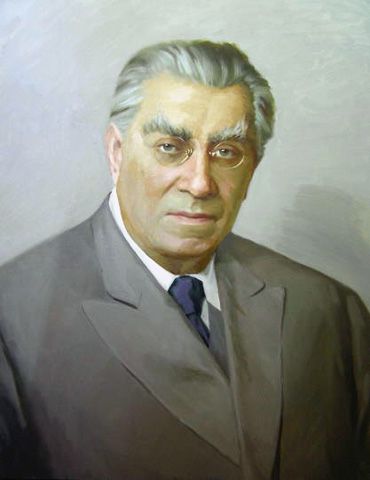
Shostakovich used to call Gliere "the fat cat".
Source: Naxos CDs (my rip)
Format: mp3, 320k/s (CBR), DDD Stereo
File Size: 253 MB (incl. cover, booklet)
Download Link – https://mega.co.nz/#!RQgT0RaZ!Jwk0eGxhgZVEng6THl3Cd3lcLmsNOqFcazhP7RE vdVk
Enjoy! Don’t share! Buy the original! 🙂
Joachim Raff: Symphony No.5, "Lenore" (No.211) – Raff’s best symphony, in its best recording (under Bernard Herrmann!)
http://forums.ffshrine.org/f92/wimpel69s-could-film-music-classical-corner-work-121898/14.html#post2228686
John Alden Carpenter: Adventures in a Perambulator – Douglas Moore – P.T.Barnum (No.213) – innocent music from innocent times
http://forums.ffshrine.org/f92/wimpel69s-could-film-music-classical-corner-work-121898/14.html#post2228755
David Stock, A Little Miracle (No.215) – varied works by a contemporary Jewish American composer
http://forums.ffshrine.org/f92/wimpel69s-could-film-music-classical-corner-work-121898/14.html#post2229356
Godfrey Ridout: No Mean City, Music for a Young Prince, La Prima Ballerina (No.216) – well-crafted neo-romantic works by a leading Canadian composer
http://forums.ffshrine.org/f92/wimpel69s-could-film-music-classical-corner-work-121898/14.html#post2229410
Fr???d???ric Talgorn: Vinum et Sanguinem (or: Hymne ??? Saint Vincent) (No.217) – striking dramatic oratorio by the French film composer (Robotjox)
http://forums.ffshrine.org/f92/wimpel69s-could-film-music-classical-corner-work-121898/14.html#post2229489
Vitězslav Nov???k: Pan (No.218) – extended late romantic tone poem by the Czech composer
http://forums.ffshrine.org/f92/wimpel69s-could-film-music-classical-corner-work-121898/14.html#post2230047
TNX but i was thinking at:George Barati First Symphony
Marc Blitzstein, The Airborne Symphony (No.219) – epic symphonic tribute to aviation, narrated by Orson Welles
http://forums.ffshrine.org/f92/wimpel69s-could-film-music-classical-corner-work-121898/14.html#post2230047
William Mathias: Dance Overture, Sinfonietta, Laudi, Vistas, Invocation & Dance (No.220) – Welsh neo-classicist
http://forums.ffshrine.org/f92/wimpel69s-could-film-music-classical-corner-work-121898/14.html#post2230098
Maria Teresa Prieto: Complete Orchestral Works (No.221) – twofer with wonderful impressionistic/folkloristic orchestral works by a forgotten Spanish woman composer
http://forums.ffshrine.org/f92/wimpel69s-could-film-music-classical-corner-work-121898/14.html#post2230799
Reinhold Gliere: Taras Bulba, Yevhen Stankovych: Rasputin (No.222) – two Russian ballets
http://forums.ffshrine.org/f92/wimpel69s-could-film-music-classical-corner-work-121898/14.html#post2230964
Tobias Picker: The Enctantadas (No.223) – work for narrator (Sir John Gielgud) and orchestra after Herman Melville
http://forums.ffshrine.org/f92/wimpel69s-could-film-music-classical-corner-work-121898/14.html#post2231702
Xavier Montsalvatge: Canciones Negras, Concierto breve (No.224) – one of the greatest Spanish composers
http://forums.ffshrine.org/f92/wimpel69s-could-film-music-classical-corner-work-121898/14.html#post2231892
———- Post added at 09:22 AM ———- Previous post was at 09:09 AM ———-
No.387
George Barati (1913-1996) was a composer, conductor, and cellist who exerted an impact on
American life from the moment he took up residence in New Jersey in 1938 until his death recently
at the age of 83. Born in Gy???r in northwestern Hungary, the 25-year-old Barati arrived in the
United States a full-blown musician, having been well prepared at Budapest???s Franz Liszt Academy,
where his teachers included Zolt???n Kod???ly and Leo Weiner. Yet despite his eventual importance
as conductor and composer, initially Barati made his mark as a cellist, serving in orchestras and
other ensembles including the Budapest Symphony and Opera Orchestra, where he was principal
cellist during his last two years in Hungary. Arriving in Princeton, Barati first took up compositional
studies with Roger Sessions, a composer whose density of thought and texture gradually found
its way into Barati???s music, but primarily he busied himself with performance: he was co-founder
of the Pro Ideale String Quartet in Princeton.
Barati???s Alpine Symphony (Symphony No.1) was produced while the composer and
his family were living in the village of St Cergue, in which is nestled a splendid ski resort, during a p
eriod in which the composer travelled as a conductor throughout Europe and Asia, returning to Hawaii
for his concerts there. Barati later said this Swiss experience was what he imagined a similar stay in
the Rocky Mountains might have been like: breathless vistas, sparkling streams, natural wonders at
once massively imposing and filled with the most minute detail. Barati even appears to have replicated
the delicate whistle of the train that climbed the mountain up from Lake Leman every day.
Barati had composed the Chant of Darkness as an expression of mourning for his daughter,
who died in 1992 at the age of 39; later he decided to balance out the pessimism of the work with this
companion piece. Much of the young Barati can be heard in the Chant of Light, completed in 1995 and
published in 1996 just weeks before his death that June, the love of intervals of seconds and sevenths,
the propensity toward tiny motivic cells, the luscious orchestral colour, and the Andante-character
that recalls the Symphony???s opening movement. Cast in true three-part song-form (A-B-A), the
piece contrasts the initial slow section with a peculiar Scherzo characterized by repeated variants
and a Bart???kian rhythmic quality.
Music Composed by George Barati
Played by the Budapest Symphony & Czech Radio Symphony Orchestras
Conducted by Laszlo Kovacs & Vladimir Valek
"Chant of Darkness was Barati’s response to the death of his 34-year-old daughter. This one-movement
work is indeed dark, expressing profound grief, but there’s a certain nobility that shines through despite
the despair. Intended as a counter-balance to the gloom of Chant of Darkness, Chant of Light is certainly
lighter in mood, but the atonal language (Barati was impressed by the intellectual rigor it required)
precludes any real sense of joy. The real draw of these works is their fascinatingly brilliant construction
and instrumentation–an aural treatise if ever there were one. Kovaks conducts Chant of Darkness,
while Chant of Light receives a full-press performance by Vladimir Valek and the Czech Radio Symphony,
who concede nothing to their Hungarian counterparts. Naxos’ sound for both venues is vivid and
richly detailed, with only a tendency toward brightness keeping it just shy of perfection."
Classics Today (10/9)
Source: Naxos CD (my rip!)
Format: mp3, 320k/s (CBR) DDD Stereo
File Size: 152 MB (incl. cover, booklet)
Download Link – https://mega.co.nz/#!tF5XHTaR!A1YLRlRHpjX3eKNO_-ksRC9vBEEGv9adhq4K0-L-PyQ
Enjoy! Don’t share! Buy the original! 🙂
Marc Blitzstein, The Airborne Symphony (No.219) – epic symphonic tribute to aviation, narrated by Orson Welles
http://forums.ffshrine.org/f92/wimpel69s-could-film-music-classical-corner-work-121898/14.html#post2230047
William Mathias: Dance Overture, Sinfonietta, Laudi, Vistas, Invocation & Dance (No.220) – Welsh neo-classicist
http://forums.ffshrine.org/f92/wimpel69s-could-film-music-classical-corner-work-121898/14.html#post2230098
Maria Teresa Prieto: Complete Orchestral Works (No.221) – twofer with wonderful impressionistic/folkloristic orchestral works by a forgotten Spanish woman composer
http://forums.ffshrine.org/f92/wimpel69s-could-film-music-classical-corner-work-121898/14.html#post2230799
Reinhold Gliere: Taras Bulba, Yevhen Stankovych: Rasputin (No.222) – two Russian ballets
http://forums.ffshrine.org/f92/wimpel69s-could-film-music-classical-corner-work-121898/14.html#post2230964
Tobias Picker: The Enctantadas (No.223) – work for narrator (Sir John Gielgud) and orchestra after Herman Melville
http://forums.ffshrine.org/f92/wimpel69s-could-film-music-classical-corner-work-121898/14.html#post2231702
Xavier Montsalvatge: Canciones Negras, Concierto breve (No.224) – one of the greatest Spanish composers
http://forums.ffshrine.org/f92/wimpel69s-could-film-music-classical-corner-work-121898/14.html#post2231892
———- Post added at 09:22 AM ———- Previous post was at 09:09 AM ———-
No.387
George Barati (1913-1996) was a composer, conductor, and cellist who exerted an impact on
American life from the moment he took up residence in New Jersey in 1938 until his death recently
at the age of 83. Born in Gy???r in northwestern Hungary, the 25-year-old Barati arrived in the
United States a full-blown musician, having been well prepared at Budapest’s Franz Liszt Academy,
where his teachers included Zolt???n Kod???ly and Leo Weiner. Yet despite his eventual importance
as conductor and composer, initially Barati made his mark as a cellist, serving in orchestras and
other ensembles including the Budapest Symphony and Opera Orchestra, where he was principal
cellist during his last two years in Hungary. Arriving in Princeton, Barati first took up compositional
studies with Roger Sessions, a composer whose density of thought and texture gradually found
its way into Barati’s music, but primarily he busied himself with performance: he was co-founder
of the Pro Ideale String Quartet in Princeton.
Barati’s Alpine Symphony (Symphony No.1) was produced while the composer and
his family were living in the village of St Cergue, in which is nestled a splendid ski resort, during a p
eriod in which the composer travelled as a conductor throughout Europe and Asia, returning to Hawaii
for his concerts there. Barati later said this Swiss experience was what he imagined a similar stay in
the Rocky Mountains might have been like: breathless vistas, sparkling streams, natural wonders at
once massively imposing and filled with the most minute detail. Barati even appears to have replicated
the delicate whistle of the train that climbed the mountain up from Lake Leman every day.
Barati had composed the Chant of Darkness as an expression of mourning for his daughter,
who died in 1992 at the age of 39; later he decided to balance out the pessimism of the work with this
companion piece. Much of the young Barati can be heard in the Chant of Light, completed in 1995 and
published in 1996 just weeks before his death that June, the love of intervals of seconds and sevenths,
the propensity toward tiny motivic cells, the luscious orchestral colour, and the Andante-character
that recalls the Symphony’s opening movement. Cast in true three-part song-form (A-B-A), the
piece contrasts the initial slow section with a peculiar Scherzo characterized by repeated variants
and a Bart???kian rhythmic quality.
]
Music Composed by George Barati
Played by the Budapest Symphony & Czech Radio Symphony Orchestras
Conducted by Laszlo Kovacs & Vladimir Valek
"Chant of Darkness was Barati’s response to the death of his 34-year-old daughter. This one-movement
work is indeed dark, expressing profound grief, but there’s a certain nobility that shines through despite
the despair. Intended as a counter-balance to the gloom of Chant of Darkness, Chant of Light is certainly
lighter in mood, but the atonal language (Barati was impressed by the intellectual rigor it required)
precludes any real sense of joy. The real draw of these works is their fascinatingly brilliant construction
and instrumentation–an aural treatise if ever there were one. Kovaks conducts Chant of Darkness,
while Chant of Light receives a full-press performance by Vladimir Valek and the Czech Radio Symphony,
who concede nothing to their Hungarian counterparts. Naxos’ sound for both venues is vivid and
richly detailed, with only a tendency toward brightness keeping it just shy of perfection."
Classics Today (10/9)
Source: Naxos CD (my rip!)
Format: mp3, 320k/s (CBR) DDD Stereo
File Size: 152 MB (incl. cover, booklet)
Download Link – https://mega.co.nz/#!tF5XHTaR!A1YLRlRHpjX3eKNO_-ksRC9vBEEGv9adhq4K0-L-PyQ
Enjoy! Don’t share! Buy the original! 🙂
A lot of thanks !
Havergal Brian: Burlesque Variations, English Suite No.5, Legend (No.225) – early and late works by the eccentric English composer (1876-1972)
http://forums.ffshrine.org/f92/wimpel69s-could-film-music-classical-corner-work-121898/14.html#post2232518
K???s???ak Yamada: Nagauta Symphony, Symphony Inno Meiji, Maria Magdalena (No.227) – highly imaginative works that fuse Western and Japanese infuences
http://forums.ffshrine.org/f92/wimpel69s-could-film-music-classical-corner-work-121898/15.html#post2232550
Alla Pavlova: Sulamith (Ballet Suite), Old New York Nostalgia (No.230) – extended suite from a very filmmusic-ky ballet by the Russian woman composer
http://forums.ffshrine.org/f92/wimpel69s-could-film-music-classical-corner-work-121898/15.html#post2236255
Einar Englund: Symphonies, The Great Wall of China Suite (No.232) – striking, powerful works by a Swedish composer – Stravinsky and Shostakovich fans should lap it up
http://forums.ffshrine.org/f92/wimpel69s-could-film-music-classical-corner-work-121898/15.html#post2236373
Evencio Castellanos: Santa Cruz de Pacairigua, Suite Avilena (No.235) – spirited, tonal music by a Venezuelan composer
http://forums.ffshrine.org/f92/wimpel69s-could-film-music-classical-corner-work-121898/15.html#post2243285
Peter Sculthorpe: Earth Cry, Piano Concerto, Memento Mori, Kakadu (No.236) – colorful, accessible modern music from Australia
http://forums.ffshrine.org/f92/wimpel69s-could-film-music-classical-corner-work-121898/15.html#post2244008
A few more re-ups, and it’s looking pretty good from No.200 onwards!
Not only are the composers/selections unique and interesting, but your post layout+content+formatting is very engaging. Lots of rich "Wiki-like" textual content with high-quality images of disc art … and the composer still photos add a real human touch.
Again nicely done!
I haven’t gone thru all this thread, but am wondering if Samuel Barber or William Walton are included?
Cheers!
Re-Ups:
Lu Qi-Ming, Ode to the Red Flag, etc (No.27) – a collection of patriotic Chinese works composed in Communist China
http://forums.ffshrine.org/f92/wimpel69s-could-film-music-classical-corner-work-121898/2.html#post2190739
Wang Xi-Lin, Yunnan Scenes, etc (No.28) – colorful Chinese tone poems and a Rachmaninovian concerto
http://forums.ffshrine.org/f92/wimpel69s-could-film-music-classical-corner-work-121898/2.html#post2190739
Louis Vierne: Les Djinns, ???ros, etc – Ernest Chausson: Po???me de l’Amour et de la Mer (No.33) – sumptuous, intoxicating French music
http://forums.ffshrine.org/f92/wimpel69s-could-film-music-classical-corner-work-121898/3.html#post2191571
Charles Koechlin: The Jungle Book (complete) (No.35) – Koechlin’s epic masterpiece, full of brilliant and imaginative touches
http://forums.ffshrine.org/f92/wimpel69s-could-film-music-classical-corner-work-121898/3.html#post2192127
Uuno Klami: Karelian Rhapsody, Sea Pictures, Kalevala Suite (No.36) – fok legend-inspired music from Finland
http://forums.ffshrine.org/f92/wimpel69s-could-film-music-classical-corner-work-121898/3.html#post2192186
John Ireland: The Forgotten Rite, The Overlanders, Mai Dun, London, etc. (No.37) – impressive works by a contemporary of Ralph Vaughan Wiliams, incl. his film score The Overlanders
http://forums.ffshrine.org/f92/wimpel69s-could-film-music-classical-corner-work-121898/3.html#post2192232
Jerome Moross: Frankie and Johnny, Willie the Weeper, Those Everlasting Blues (No.237) – another albu with concert works by the American film composer
http://forums.ffshrine.org/f92/wimpel69s-could-film-music-classical-corner-work-121898/15.html#post2244077
Philipp Ludwig Scharwenka: Arcadian Suite, Spring Waves, Night of Love (No.242) – typical German romantic music of the late 19th century
http://forums.ffshrine.org/f92/wimpel69s-could-film-music-classical-corner-work-121898/16.html#post2244751
Witold Lutoslawski: Concerto for Orchestra, Mi-Parti, Preludes, Fanfares (No.312)- 2 albums by the Polish composer, whose Concerto for Orchestra film composer Jerry Fielding so obviously loved. 😉
http://forums.ffshrine.org/f92/wimpel69s-could-film-music-classical-corner-work-121898/21.html#post2290084
Jeremy Beck: State of the Union, Sinfonietta, Death of a Little Girl (No.313) – engaging neo-tonal American music
http://forums.ffshrine.org/f92/wimpel69s-could-film-music-classical-corner-work-121898/21.html#post2290157
The Italian composer and musicologist Gian Francesco Malipiero led two very different lives.
On the one hand he dedicated himself to the creation of complete editions of music by the great Italian
composers, Monteverdi and Vivaldi, while at the same time composing a large catalogue of music in a
personal and distinctly 20th century style. Though largely self-taught, he was a composer in every genre,
including a symphonic catalogue that contained eleven symphonies. The present disc reveals both
sides of his personality, with two original and vivid orchestral scores, and two works in the style of
composers from the 17th and 18th centuries that Malipiero dressed in modern orchestral colours.
This collection showcases Malipiero’s style at its most obviously neo-classical, not just because
he reworked pieces by Gabrieli, but also through allusions to the Commedia dell’Arte and the
subject matter of his ballet Stradivario, which deals with the theft of a precious violin by said maker.
Music Composed by Gian Francesco Malipiero
Played by the Orchestra della Svizzera Italiana
Conducted by Christian Benda
"The ballet Stradivario tells the bizarre tale of an avaricious instrument collector who steals a rare Stradivarius
violin from an itinerant musician, which causes the other instruments in his collection to rebel and take revenge
on the evil man. The score is a veritable Concerto for Orchestra as nearly every instrument briefly takes center
stage. Following the remarkable succession of solos, and ominous brass episode signals the beginning of the
attack on the collector, who is crushed to death by his own instruments in the course of an agitated dance.
Afterward, the precious Strad is returned to its grateful owner, and calm returns to collector’s studio. This time,
the music is inventive and clever?nd the playing displays a confidence and swagger… Perhaps this fine
recording will inspire some American company to produce this remarkable ballet."
American Record Guide
"…this disc is another essential acquisition for all Malipiero aficionados. Incidentally, the notes contain some
amazing biographical data gathered by a Malipiero specialist, the late John Waterhouse, who provided
annotations for previous Malipiero releases on Marco Polo. Bravo!"
Fanfare
Source: Naxos/Marco Polo CD (my rip!)
Format: mp3, 320k/s (CBR), DDD Stereo
File Size: 140 MB (incl. cover, booklet)
Download Link – https://mega.co.nz/#!5AZHzR6a!UBROkFAZYHxstuu2SmqKPSQ4ZXgeO2QwbEtplRd mUys
Enjoy! Don’t share! Buy the original! 🙂
Peter Boyer: Ghosts of Troy, Three Olympians, Titanic (No.39) – appealing neo-tonal works by a student of Jerry Goldsmith’s
http://forums.ffshrine.org/f92/wimpel69s-could-film-music-classical-corner-work-121898/3.html#post2192286
Heitor Villa-Lobos: Genesis, Rudepoema, Erosao, Amazonas, Dawn in a Tropical Forest (No.40) – masterpieces by the greatest Brazilian composer, on 2 CDs
http://forums.ffshrine.org/f92/wimpel69s-could-film-music-classical-corner-work-121898/3.html#post2192831
J???n Leifs: "Saga Symphony" (S???guhetjur) (No.41) – epic symphony inspired by an Icelandic folk saga
http://forums.ffshrine.org/f92/wimpel69s-could-film-music-classical-corner-work-121898/3.html#post2192865
Reinhold Gliere: Symphony No.3, "Ilya Murometz" (No.42) – Giere’s masterpiece in a powerful reading by Leon Botstein
http://forums.ffshrine.org/f92/wimpel69s-could-film-music-classical-corner-work-121898/3.html#post2192981
Peter Maxwell Davies: Caroline Mathilde, Ojaj Festival Overture (No.43) – typically masterful and accessible works by the most important living British composer
http://forums.ffshrine.org/f92/wimpel69s-could-film-music-classical-corner-work-121898/3.html#post2193459
Ernest Fanelli: The Romance of the Mummy (No.44) – a symphonic tableau far ahead of its time, for which the composer suffered
http://forums.ffshrine.org/f92/wimpel69s-could-film-music-classical-corner-work-121898/3.html#post2193500
Erik Satie: Ballets (Parade, Relache, Les Aventures de Mercure) (No.45) – brilliant, eccentric ballet music by the French composer
http://forums.ffshrine.org/f92/wimpel69s-could-film-music-classical-corner-work-121898/3.html#post2193531
John Foulds: Three Mantras, Apotheosis, Lyra Celtica, Mirage (No.46) – superb, unusual orchestral works by this forgotten British composer
http://forums.ffshrine.org/f92/wimpel69s-could-film-music-classical-corner-work-121898/3.html#post2193583
"Romantic Ireland" (Victory, Potter, Duff, O’Riada) (No.47) – lighthearted, shorter orchestral works
http://forums.ffshrine.org/f92/wimpel69s-could-film-music-classical-corner-work-121898/4.html#post2193636
Richard Arnell: The Great Detective, The Angels (No.50) – two great ballets by the neglected English composer, The Great Detective being, of course, Sherlock Holmes
http://forums.ffshrine.org/f92/wimpel69s-could-film-music-classical-corner-work-121898/4.html#post2194246
Milhaud: Cr???ation du Monde – Weill: Dreigroschenmusik – Kurka: Good Soldier Schweijk (No.51) – three classics of jazz-infused music for chaber orchestra
http://forums.ffshrine.org/f92/wimpel69s-could-film-music-classical-corner-work-121898/4.html#post2194313
Max von Schillings: Meergru???, Seemorgen, etc (No.53) – opulent German late romanticism
http://forums.ffshrine.org/f92/wimpel69s-could-film-music-classical-corner-work-121898/4.html#post2194988
Frederick Converse: Song of the Sea, Festival of Pan, American Sketches (No.54) – intriguing works by one of the first important American composers
http://forums.ffshrine.org/f92/wimpel69s-could-film-music-classical-corner-work-121898/4.html#post2195072
Niels Wilhelm Gade: Ossian, Summer’s Day, Hamlet (No.59) – beautiful early romantic music by a friend and colleague of Mendelssohn’s
http://forums.ffshrine.org/f92/wimpel69s-could-film-music-classical-corner-work-121898/4.html#post2195823
Robert Raines: The Return of Odysseus (No.60) – stark ballet based on the Homeric saga
http://forums.ffshrine.org/f92/wimpel69s-could-film-music-classical-corner-work-121898/4.html#post2195863
Arthur Honegger: Pacific 231, Rugby, Pastorale, Mermoz (No.61) – varied and colorful shorter works by the Swiss-French composer, including his classic Pacific 231
http://forums.ffshrine.org/f92/wimpel69s-could-film-music-classical-corner-work-121898/4.html#post2196464
Arthur Honegger: Jeanne d’Arc au Bucher (No.63) – dramatic canatata by Honegger
http://forums.ffshrine.org/f92/wimpel69s-could-film-music-classical-corner-work-121898/5.html#post2196524
Julian Orb???n: Three Symphonic Versions, Symphonic Dances, Concerto Grosso (No.64) – exquisite music from South America
http://forums.ffshrine.org/f92/wimpel69s-could-film-music-classical-corner-work-121898/5.html#post2196579
Zolt???n Kod???ly: H???ry Jan???s Suite, Dances of Gal???nta, Peacock Variations (No.65) – delightfully folkloristic works by an important Hungarian composer
http://forums.ffshrine.org/f92/wimpel69s-could-film-music-classical-corner-work-121898/5.html#post2196604
———- Post added at 09:57 AM ———- Previous post was at 09:08 AM ———-
Edward Joseph Collins: The Masque of the Red Death, Irish Rhapsody, A Set of Four (No.70) – Another unjustly neglected American composer
http://forums.ffshrine.org/f92/wimpel69s-could-film-music-classical-corner-work-121898/5.html#post2197309
Shiro Fukai: Creation, Chants of Java (No.72) – Japanese composer much influenced by French impressionism
http://forums.ffshrine.org/f92/wimpel69s-could-film-music-classical-corner-work-121898/5.html#post2197755
Takashi Yoshimatsu: Kamui-Chikap Symphony, Ode to the Birds and Rainbow (No.73) – colorful music by a Japanese composer obsessed with birds and the sea
http://forums.ffshrine.org/f92/wimpel69s-could-film-music-classical-corner-work-121898/5.html#post2197775
Karl Weigl, Symphony No.6 ("The Apocalyptic") (No.74) – epic, opulent symphony in a fin-de-si???cle Viennesse style
http://forums.ffshrine.org/f92/wimpel69s-could-film-music-classical-corner-work-121898/5.html#post2197775
Georges Auric: Ph???dre, Le Peintre et son Mod???le (No.75) – two great ballets by the prolific film composer and member of Les Six
http://forums.ffshrine.org/f92/wimpel69s-could-film-music-classical-corner-work-121898/5.html#post2197831
Samuel Barber: Medea Suite, Third Essay, Fadograph of a Yestern Scene (No.76) – intense ballet by Barber based on Greek mythology
http://forums.ffshrine.org/f92/wimpel69s-could-film-music-classical-corner-work-121898/5.html#post2198494
Jean Sibelius, The Lemmink???inen Suite (No.77) – extended cycle of tone poems that includes The Swan of Tuonela
http://forums.ffshrine.org/f92/wimpel69s-could-film-music-classical-corner-work-121898/5.html#post2198494
———- Post added at 09:33 AM ———- Previous post was at 08:57 AM ———-
No.389
English composer Matthew Curtis (*1959) was born in Cumbria and read Classics
at Worcester College, Oxford before embarking on a business career in London. He has
recorded four albums of his highly melodic and colourfully orchestrated music, which
is a testament to the ongoing popularity and vitality of "British light music".
Music Composed by Matthew Curtis
Played by the Royal Ballet Sinfonia
Conducted by Gavin Sutherland
"Fortunately, melody is now coming back into fashion, so this collection of the light-hearted
music of the Cumbrian composer Matthew Curtis (b1959) can expect to receive a warm
welcome. It opens with the scintillating concert overture, Fiesta, which has a most beguiling
secondary theme; Curtis???s style is in the best traditions of Eric Coates, Haydn Wood and other
British composers, about whom Andrew Lamb wrote so enthusiastically in last November???s
???Collection???. Coates is the strongest influence, structurally, in the throbbing allegros, and in
the specially English ???tennis??? waltz (there is an engaging one in the Amsterdam Suite, which
is not in the least Dutch).
Curtis can also readily create a haunting pastoral atmosphere, as in ???Lonely City??? from the
Amsterdam Suite with its winding saxophone melody (curiously reminiscent of Bizet), and
there is a perky march (???Trams and Crowds???) to round off. The ???Pas de deux??? brings a haunting
oboe melody to recall Ronald Binge???s ???Windmill??? and the ???Holiday Mood??? of the richly scored
Paths to Urbino suite has the kind of jiggy syncopations that recall Curzon and Farnon. Its fourth
movement, ???Music of the Fields???, then brings a meltingly romantic horn solo, and the melody
which follows has much in common with the cherishable central movement of Coates???s
Three Elizabeths Suite, and is by no means inferior to it. Then ???Journey???s End??? brings a deliciously
jaunty Italianate (but still essentially British) tarantella, and the closing ???Outward Bound???
makes a spirited and light-hearted finale.
I have suggested the influences of other composers, but Curtis is his own man: his scoring
is particularly skilful (he writes splendidly for the horns) and his fund of invention
inexhaustible. The performances are first class, the recording bright and sparkling."
Gramophone
Source: Campion Cameo CD (my rip!)
Format: mp3, 320k/s (CBR), DDD Stereo
File Size: 194 MB (incl. cover, booklet)
Download Link – https://mega.co.nz/#!ZIgjzCLa!ZfAF-0pfT7hPP9LU8GnFvnKflkUPf0lyQI4eFrpJctI
Enjoy! Don’t share! Buy the original! 🙂
I downloaded a few to test, and I already know what I want to pick up for myself.
One request though: since you have Naxos’ Bret???n collection, I was wondering if you had or knew of any recordings of his oratorio El Apocalipsis. It’s one of my favorite works by him and I’ve never found any recordings of it available anywhere.
More information in the metatags of the three files.
My Files (http://www.mediafire.com/?5uaar8rp8brnu)
wimpel: Even if you didn’t find anything, thanks for trying to help!
Manuel Rosenthal: Les petits metiers, Musique de table, Songs (No.137) – very charming miniatures by the French light composer and Offenbach (the composer, not the city) expert
http://forums.ffshrine.org/f92/wimpel69s-could-film-music-classical-corner-work-121898/9.html#post2212527
British Light Music (Tomlinson, Hedges, Martelli, Lord, Langley, Parker) (No.138) – two albums of colorful, charming light music from all over Britain
http://forums.ffshrine.org/f92/wimpel69s-could-film-music-classical-corner-work-121898/9.html#post2212601
Stevan Hristic: The Legend of Ohrid – Josip Slavensky: Balakanophonia (No.140) – two ballets from the Balkan region
http://forums.ffshrine.org/f92/wimpel69s-could-film-music-classical-corner-work-121898/9.html#post2212682
Anthony Iannaccone: Waiting for Sunrise, Night Rivers, West End Express (No.141) – approachable contemporary American music
http://forums.ffshrine.org/f92/wimpel69s-could-film-music-classical-corner-work-121898/9.html#post2213240
Alfred Bruneau: Messidor, L’Attaque du Molin, Nais Micoulin (No.143) – important French composer who tried to incorporate social realism into opera
http://forums.ffshrine.org/f92/wimpel69s-could-film-music-classical-corner-work-121898/9.html#post2213344
John Duffy: Heritage Fanfare & Chorale, Symphonic Dances, Suite (No.145) – extended symphonic suite from a TV documentary about the history of Jewish people
http://forums.ffshrine.org/f92/wimpel69s-could-film-music-classical-corner-work-121898/9.html#post2214730
Igor Markevitch, Le Nouvel Age, etc. (No.146) – masterful, inventive ballet score by the famed conductor
http://forums.ffshrine.org/f92/wimpel69s-could-film-music-classical-corner-work-121898/9.html#post2214730
Kara Karayev: Symphony No.3, Leyla and Mejniun, Suite from "Don Quixote" (No.147) – robust Soviet symphonic music, plus a suite from the film score Don Quixote
http://forums.ffshrine.org/f92/wimpel69s-could-film-music-classical-corner-work-121898/9.html#post2214781
Ralph Vaughan Williams: Job, A Masque for Dancing (+ Holst, The Perfect Fool) (No.149) – RVW’s enigmatic dance pantomime
http://forums.ffshrine.org/f92/wimpel69s-could-film-music-classical-corner-work-121898/9.html#post2214824
I case you’re wondering why you can’t see the covers/pictures at the moment: I have exceeded my bandwidth with the image provider (or, rather, you have exceeded my bandwidth), so I either have to go "plus" or have to wait till the image quota resets itself and the pictures are once again visible.
———- Post added at 09:31 AM ———- Previous post was at 08:40 AM ———-
No.390
Kenneth Fuchs (*1956) is one of America???s leading composers and his latest collaboration with
award-winning conductor JoAnn Falletta and the London Symphony Orchestra???the first
volume of which (8.559224) was nominated for two GRAMMY??? awards???reveals the breadth
of his achievement. Atlantic Riband evokes the struggle and ultimate victory of
ocean-crossing immigrants to America in an orchestral showpiece of power and splendor.
American Rhapsody is a lyrical romance for violin and orchestra, and Divinum Mysterium
a single-movement viola concerto rich in expressive tapestry. Concerto Grosso shows
Fuchs???s sheer energy, and Discover the Wild is an orchestral overture of lyricism and color.
Music Composed by Kenneth Fuchs
Played by the London Symphony Orchestra
With Michael Ludwig (violin) & Paul Silverthorne (viola)
Conducted by JoAnn Falletta
" ???Atlantic Riband exudes optimism and affirmation of the indomitable human
spirit throughout its 13-minute duration, even in its quietest sections. It doesn???t require
too much imagination to hear the waves, the sea birds, and the gentle rocking of
the ship in this work, which would work equally well on the serious concert stage or
in a pops concert context.
American Rhapsody is described as a romance for violin and orchestra???a gentle
exercise with beautiful flowing lines in both the solo instrument and the orchestra. The
sweetly singing tone of violinist Michael Ludwig is all that one could ask for to bring
this work off convincingly.
Divinum Mysterium???is very similar to the preceding work. If you???re not paying attention,
you may not notice that a new piece has begun, other than that the timbre of the solo
instrument has become much darker. There are plenty of opportunities throughout the
piece for the violist to show off his technique and musicianship, including a cadenza or
two. Violist Paul Silverthorne has plenty of each of those qualities to show off, too,
and his playing is most impressive.
Falletta makes a good case interpretively for these works, as do the various soloists.
This is a thoroughly enjoyable CD, which should have wide appeal among the readers
of this magazine. Fuchs has a good ear for color and sonority and the skill to put
together convincing musical fabrics."
Fanfare
Source: Naxos CD (my rip!)
Format: mp3, 320k (CBR), DDD Stereo
File Size: 136 MB (incl. cover, booklet)
Download Link – https://mega.co.nz/#!UFxiDCSb!YGOvp0pjogofrOSGUV-zuGfDtaMJPYPgBGa2ShdC6VU
Enjoy! Don’t share! Buy the original! 🙂
wimpel, you wondered in another thread if it is possible to get another Mega account once you had used up your 50 Gb limit.
I just did it. You have to use a different email address and account name. As I use proxy email addresses from hidemyass.com there may be no limitation to the number of accounts at Mega.
I used bishtyboshty and kantankerous as my first 2 account names (they might have been cunning enough to spot it if I’d used bishtyboshty2).
There is obviously no IP-related limit.
John Fernstr???m Symphony 6, The Capricious Troubadour (No.323) – a Swedish master of the mid 20-th century
http://forums.ffshrine.org/f92/wimpel69s-could-film-music-classical-corner-work-121898/22.html#post2309617
Hi wimpel, this re-up has been returning "Decryption error" ever since it was posted on 10th July.
No.391
There is much early Gustav Holst here, music full of oriental excess – Indra and Sita –
and of Wagnerian rhetoric – A Winter Idyll and Elegy (In Memoriam William Morris). There is
some later Holst here, music full of nervous vigor and robust brilliance – The Lure ballet music
and particularly the dances from The Morning of the Year. And while not all of the music is
top-drawer Holst – "the later the date, the better the music" holds true – most of it is at least interesting
and some of it is flat-out terrific. Indra has its moments of poetic grandeur; A Song of the Night
for violin and orchestra has its own special dark lyricism; the Invocation for cello and orchestra
has its tone of solemn intensity.
Music Composed by Gustav Holst
Played by the London Symphony & London Philharmonic Orchestras
With Lorraine McAslan (violin) & Alexander Baillie (cello)
Conducted by David Atherton
"This 76-minute collection of shorter works by Holst offers up a series of delights whilst
revealing various sides of that composer’s character. A Winter Idyll shows a very approachable
Holst, with open-air textures and tunes (‘tunes’ more than ‘themes’, or even ‘melodies’)
that exude playfulness. David Atherton inspires the LPO to great heights of precision and
they play with heartfelt advocacy.
The Elegy (In Memoriam William Morris) is a work of great integrity. More than this, though,
it is simply gorgeous in its dark, lush colourings. Impassioned, concentrated and confident,
it builds impressively to a powerful climax. The piece is actually the second movement from
the so-called ‘Cotswolds’ Symphony. Astonishingly, the symphony was in effect forgotten
after its 1902 premiere until its revival in 1982.
Indra is Holst’s earliest completed extended work from his ‘Indian period’. Holst was later to
set hymns from the Rig Veda, between 1907 and 1912. The work is full of glowing textures;
a climax (around four minutes in) features blazing brass. The performance under Atherton’s
baton is remarkable convincing, mainly because he is able to keep the overall structure in
mind despite the many passages where there might be a temptation to linger.
Two works for solo instrument and orchestra make an appearance. First, A Song of the Night,
composed in 1905 but not performed, Lewis Foreman’s notes tell us, until 1984. Lorraine
McAslan produces an appropriately throaty tone for the work’s opening, then ruminates
long and deeply. This is an involving meditation during which McAslan’s filigree and soaring
phrases confirm her affinity with Holst’s music.
Invocation was intended as a companion piece to A Song of the Night and it, too, is blessed
with a seemingly ideal soloist (here cellist Alexander Baillie). Baillie plays Invocation so
lovingly and yet so plaintively that this account leaves a lasting impression on the listener.
The two solo items sandwich the more intense, punchy Interlude from Act 3 of Sita.
This six-minute interlude is absolutely full of life, Atherton projecting a visceral feeling
of mystic ecstasy.
For the final two items, the LSO is used. The music for the ballet The Lure came about
in response to a commission from Chicago. Holst uses a folk-tune from W. G. Whittaker’s
North Countrie Ballads, Songs and Pipe-Tunes (it appears at 4’13). However, it appears
the ballet was never staged and this recording (edited by Imogen Holst and Colin Matthews)
seems to be its first manifestation, live or on disc. It is a dynamic, exciting work that
deserves inclusion in the orchestral repertoire.
The Morning of the Year was the first score ever commissioned by the BBC Music
Department (the work is a representation of mating in Spring!). Here we have the four
Dances, plus Introduction (in the ballet the dances alternate with choral interludes). The
Dances are recorded in a concert version edited by Imogen Holst and Colin Matthews.
They take in a wide variety of moods, vividly painted and superbly recorded here.
This disc magnificently proves that ‘lesser-known’ does not necessarily equate to ‘lesser’ –
there are some remarkable finds here. There is much more to Holst than, say The Planets
and The Perfect Fool. Here is a good place as any (and better than most) to embark on
the voyage of discovery.
Musicweb
Source: Lyrita CD (my rip!)
Format: mp3, 320k/s (CBR), ADD/DDD Stereo
File Size: 174 MB
Download Link – https://mega.co.nz/#!kJoEzCKR!DyG-MEUiF39GbIRrZhRbBDrpvk5aXkwPKr0TeUu1O4I
Enjoy! Don’t share! Buy the original! 🙂
Lebanese composers drawing their inspiration from the West have often chosen France as the
country in which to continue their technical training and increase their artistic awareness.
Bechara El-Khoury, born in Beirut in 1957, is one such composer. He began his musical
education in Lebanon with Hagop Arslanian (piano, harmony, counterpoint, fugue and analysis)
before arriving in Paris in 1979 to complete his studies (composition and orchestration) with
Pierre-Petit, the then director of the ???cole Normale de Musique founded by Alfred Cortot.
The ???Ruines de Beyrouth??? Symphony, Op. 37, (Ruins of Beirut) composed in memory of
the 1975 outbreak of civil war in Lebanon, is without doubt his most ambitious work to date.
It belongs to a trilogy of compositions inspired by this tragic event, the others being the
Symphonic Poem No.1, Op. 14 ???Le Liban en flammes??? (Lebanon in flames) and the
Requiem, Op. 18 ?????? la m???moire des martyrs libanais de la guerre??? (In memory of the Lebanese
war martyrs), both written in 1980. The symphony was composed in 1985 and although it reflects
the genre???s typical four-part scheme, the individual movements make no use of traditional structures
or means of development. Instead, each has the air of a lyric poem, a mosaic of feelings which
constantly contrasts a consideration of the tragic rift, a work of collective folly, with the artist???s
intimate thoughts, man???s expression when confronted with the event in his existential solitude.
Music Composed by Bechara El-Khoury
Played by the National Symphony Orchestra of Ukraine
Conducted by Vladimir Sirenko
"The Symphony was composed (in 1985) in the wake of the civil war in the Lebanon and is a
powerful, tragically arresting work, laid out in four fairly traditional movements. But it is without
any kind of conventional development of ideas; is essence it is a kaleidoscopic set of brief variants.
Even more than the vividly scored symphony, the three shorter works rely a great deal on
orchestral textures, with contrasting sonorities, dynamics, mood and colouring, all skillfully manipulated
to give an illusion of forward movement (rather than development). The brass scoring is emphatic,
with exuberant use of the horns. The restless symphonic meditation, Hill of Strangeness
(???Colline del??????trange???) ???is a journey through a fog pierced by glimpses of light??? and is concerned with
???solitude and the struggle of the light to come through dark clouds???. It is certainly enigmatic.
Harmonies cr???pusculaires was written in memory of the conductor Pierre Dervaux and is essentially
valedictory in feeling, but the finality of death is powerfully conveyed by more shattering brass
interruptions, with an answering tolling bell. The dream-like Wine of the Clouds (???Le Vin des nuages???)
is a confrontation between silence and the violence of nature???, opening impressionistically and ending
with a torrent of sound, including the composer???s characteristic horn glissandi."
Penguin Classical Guide
Source: Naxos CD (my rip!)
Format: mp3, 320k/s (CBR), DDD Stereo
File Size: 149 MB (incl. cover, booklet)
Download Link – https://mega.co.nz/#!KgBTgRpQ!EoADsGQQJaLaY9tp8HOvKD5xvS9KivVgj-blZZQ326I
Enjoy! Don’t share! Buy the original! 🙂
Many of the pictures of the posts were deleted, it’s awful T_T.
Leonardo
Many of the pictures of the posts were deleted, it’s awful T_T.
Leonardo
wimpel already stated in post 787…
I case you’re wondering why you can’t see the covers/pictures at the moment: I have exceeded my bandwidth with the image provider (or, rather, you have exceeded my bandwidth), so I either have to go "plus" or have to wait till the image quota resets itself and the pictures are once again visible.
https://mega.co.nz/#!YUY3QSYC!ZVTU9Xe0Nj2f4HhSKaRCclpLda1V8I_kkfZjKBd 2rTE
https://mega.co.nz/#!YUY3QSYC!ZVTU9Xe0Nj2f4HhSKaRCclpLda1V8I_kkfZjKBd 2rTE
That works fine. Many thanks.
Mozart Camargo Guarnieri: Symphony No.2 ("Uirapuru"), No.3, Festive Overture (No.151) – evocative Brazilian music
http://forums.ffshrine.org/f92/wimpel69s-could-film-music-classical-corner-work-121898/9.html#post2215478
Norman Dello Joio: Diversion of Angels, Seraphic Dialogues, Exaltation of Larks (No.152) – three ballets for the celebrated choreographer Martha Graham
http://forums.ffshrine.org/f92/wimpel69s-could-film-music-classical-corner-work-121898/10.html#post2215529
Silvestre Revueltas: La Coronela, Itinearios, Colorines (No.153) – colorful and edgy music by the troubled Mexican composer
http://forums.ffshrine.org/f92/wimpel69s-could-film-music-classical-corner-work-121898/10.html#post2215579
Jean Francaix: Les malheurs de Sophie, Les bosquets de Cyth???re (No.154) – sprightly French ballets in a neo-classical style
http://forums.ffshrine.org/f92/wimpel69s-could-film-music-classical-corner-work-121898/10.html#post2216324
George Enescu, Vox Maris, Voix de la Nature (No.155) – Vox Maris is a masterpiece of symphonic poems!
http://forums.ffshrine.org/f92/wimpel69s-could-film-music-classical-corner-work-121898/10.html#post2216324
Menotti: The Apocalypse – Dello Joio: Meditations on Ecclesiastes – LoPresti: Masques (No.156) – Menotti’s most substantial orchestral work, plus Dello Joio’s Pulitzer Prize-winning Meditations
http://forums.ffshrine.org/f92/wimpel69s-could-film-music-classical-corner-work-121898/10.html#post2216355
Dmitri Shostakovich: Symphony No.11, "The Year 1905" (No.158) – Shosty’s epic symphonic tribute to the failed revolution of 1905
http://forums.ffshrine.org/f92/wimpel69s-could-film-music-classical-corner-work-121898/10.html#post2216418
David Matthews: The Music of Dawn, A Vision and a Journey, Concerto in Azzurro (No.159) – approachable, very well crafted modern music by an oft-commissioned British composer
http://forums.ffshrine.org/f92/wimpel69s-could-film-music-classical-corner-work-121898/10.html#post2216497
Fiesta Criolla – Latin American Orchestral Works (No.160) – a bouquet of Latin American orchestral works, some lollipops, some more substantial
http://forums.ffshrine.org/f92/wimpel69s-could-film-music-classical-corner-work-121898/10.html#post2216583
Samuel Coleridge Taylor, George Buttwerworth, Hamish MacCunn: Orchestral Works (No.163) – pastoral English music from the early 20th century
http://forums.ffshrine.org/f92/wimpel69s-could-film-music-classical-corner-work-121898/10.html#post2219369
———- Post added at 09:45 AM ———- Previous post was at 09:14 AM ———-
No.393
Malcolm Arnold was born in 1921 in Northampton, where his father was a well-to-do
shoe manufacturer. There was music in the family, both from his father and from his
mother, a descendant of a former Master of the Chapel Royal. Instead of the usual
period at a public school, he was educated privately at home. As a twelve-year-old
he found a new interest in the trumpet and in jazz after hearing Louis Armstrong, and
three years later he was able to study the instrument in London under Ernest Hall,
subsequently winning a scholarship to the Royal College of Music, where his composition
teacher was Gordon Jacob. Two years later he left the College to join the
London Philharmonic Orchestra as second trumpet. Meanwhile he had won a composition
prize for a one-movement string quartet. It was as an orchestral player that he was able
to explore the wider orchestral repertoire, in particular the symphonies of Mahler.
Since 1948 Malcolm Arnold was able to earn his living as a composer. In the 1960s
he settled in Cornwall, where he became closely involved with the musical activities
of the county. In 1972 he moved to Dublin, his home for the next five years, and
then, in 1977, to Norfolk. Over the years his work has been much in demand for
film scores, of which he has written some eighty. He has written concertos for an
amazing variety of instruments, nine numbered symphonies, sinfoniettas, concert
overtures and other orchestral works. His chamber music is equally varied and
there is a set of works for solo wind and other instruments, aptly meeting the
demands of competitive as of solo recital performance.
The two sets of English Dances were a big hit with audiences, so much so that
he was compelled to write sets of Scottish, Cornish, Irish and Welsh dances
(the latter had not been composed when this recording was made) as well. All of
these have been mainstays of the British light music repertoire ever since.
Music Composed by Malcolm Arnold
Played by The Philharmonia Orchestra
Conducted by Bryden Thomson
"Malcolm Arnold’s two sets of English Dances were in many ways his compositional
breakthrough, and they are quite delightful miniatures – almost vignette-like, charming,
wonderfully colorful, memorably tuneful and quite expertly scored. They are truly wonderful
contributions to the repertoire of charming, lighter but still substantial music that encompasses
such works as Dvorak’s Slavonic Dances and Tchaikovsky’s ballet suites. The Scottish Dances
that followed a couple of years later are perhaps even more delightful in their semi-folksy,
spirited and unabashedly romantic idiom; atmospheric works with several wonderful themes –
conservative for their time yet personal in idiom and really sounding like little else. The Cornish
Dances are somewhat more troubled – the melodies do not flow as easily and the mood is more
overcast and bitingly ironic; the music is still quite beautiful but in a less off-handed manner.
The Irish Dances are even more shadowy – the traces of careless joy are rarely allowed to
bubble to the surface, and if they do they are soon quenched by something more serious. They
are still beautiful and attractive miniatures, even though they are not as good-natured as the
English Dances, say.
The performances are quite magnificent, however (although I have not heard the Boult
performances that are often counted as the benchmark). The Philharmonia Orchestra play with
all the color, atmosphere and subtlety the music calls for, from the joyful exuberance of the earlier
sets to the more varied and less unambiguous later pieces. Bryden Thomson clearly loves and
cares for the music, and his sense of rhythm, color and momentum is impressive. The sound
quality is warm and rich and vivid – the recording is, perhaps, a little close, but the overall impact
is marvelous. The disc is filled out with two inconsequential numbers from Arnold’s ballet
Solitaire, neither of which I would care to hear again. The main offerings, however, are so
charming and well performed that the disc as a whole is something of an essential listening."
Amazon Reviewer
Source: Chandos CD (my rip!)
Format: mp3, 320k/s (CBR), DDD Stereo
File Size: 133 MB (incl. cover, booklet)
Download Link – https://mega.co.nz/#!ZI4BWSDI!AxJ5K1KgO2G4C3sfHElQ8G9XzMIw1DdQh0vB4X9 jXr8
Enjoy! Don’t share! Buy the original! 🙂
Michael Horwood: Symphony No.1, National & Amusement Park Suites (No.164) – colorful, accessible neo-tonal American usic
http://forums.ffshrine.org/f92/wimpel69s-could-film-music-classical-corner-work-121898/10.html#post2219735
Charles Tomlinson Griffes: The Kairn of Koridwen (No.165) – intriguing ballet inspired by Druid lore
http://forums.ffshrine.org/f92/wimpel69s-could-film-music-classical-corner-work-121898/10.html#post2219832
Mikis Theodorakis: Carnaval (Ballet Suite), Raven (No.166) – politically charged works from Greece
http://forums.ffshrine.org/f92/wimpel69s-could-film-music-classical-corner-work-121898/10.html#post2219864
Roger-Ducasse: Orph???e, Nocturne de printemps, Petite Suite, Le Joli Jeu de Foret (No.169) – a second collection of Roger-Ducasse
http://forums.ffshrine.org/f92/wimpel69s-could-film-music-classical-corner-work-121898/11.html#post2220597
Joaqu???n Turina: Danas fant???sticas, Sinfonia Sevillana, Ritmos (No.170) – impressive impressionistic works by this important Spanish composer
http://forums.ffshrine.org/f92/wimpel69s-could-film-music-classical-corner-work-121898/11.html#post2220682
Leevi Madetoja: Symphony No.3, The Ostrobothnians Suite, Okon Fuoko (No.171) – Jean Sibelius wasn’t the only fine Finnish composer!
http://forums.ffshrine.org/f92/wimpel69s-could-film-music-classical-corner-work-121898/11.html#post2220720
Florencio Asenjo: A Thousand and One Nights, Don Quiiote (No.172) – contemporary American ballet music
http://forums.ffshrine.org/f92/wimpel69s-could-film-music-classical-corner-work-121898/11.html#post2220756
Kurt Weill: Bastille-Music, Oil-Music, Suite panam???enne, Women’s Dances (No.173) – typically brash and cool works by the composer of the Threepenny Opera
http://forums.ffshrine.org/f92/wimpel69s-could-film-music-classical-corner-work-121898/11.html#post2221195
Music inspired by Don Quixote/Quijote (Rodrigo, Garc???a Rom???n, Fern???ndez Guerra) (No.174) – a collection of orchestral works inspired by Cervantes
http://forums.ffshrine.org/f92/wimpel69s-could-film-music-classical-corner-work-121898/11.html#post2221222
Salve Antverpia (Mortelmans, Alpaerts, van Hoog, Blockx, Sternefeld) (No.175) – lyrical, history-inspired works by composers connected to that Belgian city
http://forums.ffshrine.org/f92/wimpel69s-could-film-music-classical-corner-work-121898/11.html#post2221253
———- Post added at 09:50 AM ———- Previous post was at 08:54 AM ———-
No.394
Flautist, conductor, writer and composer, Meredith Willson (led a colourful life that
began when at just 19 he was appointed principal flute of the famous Sousa band. A period
in ???serious??? music as composer and conductor for the National Broadcasting Corporation,
changed course when he moved into the film industry writing background music. That was
the forerunner of a major career composing Broadway musicals. Where most others have
failed, he successfully composed to light music symphonies of ready attraction, and clothed
in the most attractive orchestral colours.
Willson achieved his greatest triumph with his musical revue The Music Man, for which
he wrote the book, the lyrics and the music. It opened on Broadway on 19 December 1957
and became an instant success. The sparkling score and the hit chorus "76 Trombones" made
Willson a household name. He followed this with another Broadway hit, The Unsinkable Molly
Brown (1960). Both were made into movies. In addition to his two symphonies, Willson
composed a symphonic poem, The Jervis Bay, O.O. McIntyre Suite, based on the writing
of the famed columnist, Symphonic Variations on an American Theme, Song of Steel,
premi???red by John Charles Thomas, Radio City Suite, a choral work, Anthem of the
Atomic Age, and numerous shorter orchestral pieces in a lighter vein. He died in 1984.
His two symphonies, subtitled A Symphony of San Francisco (No.1) and The Missions of
California (No.2) respectivey, are not light hearted works, in fact they are very serious symphonic
arguments in a style then popular in the US.
Music Composed by Meredith Willson
Played by the Moscow Symphony Orchestra
Conducted by William T. Stromberg
"The symphonies are actually very robust and large-scaled endeavors whose elaborate and
sure-footed facture and Romantic rhetoric derive directly from the Chadwick school by way of
the latter’s pupil Henry Hadley, with whom the precocious Iowan [Willson] studied… Those of
us who are convinced that a huge and fertile layer of medium-range musical Americana remains
largely and unjustly neglected by the recording industry have to applaud this example of the
industry and dedication of Naxos’s ‘American Classics’ series, especially coming the heels of
its wonderful Roger Russell Bennett tribute."
Source: Naxos CD (my rip!)
Format: mp3, 320k/s (CBR), DDD Stereo
File Size: 165 MB (incl. cover, booklet)
Download Link – https://mega.co.nz/#!glll1QJY!TR8XgTLsPw1tjYQXJKaHpA6dW4QrXQr-Qt1qwHZC8Hc
Enjoy! Don’t share! Buy the original! 🙂
One question, do you have Hindemith – Concertpiece For Trautonium & Strings in your huge collection of music???? Thanks for the answer.
Best regards
Leonardo
thank you very much for all your music. i particularly enjoyed – Peter Boyer: Ghosts of Troy, Three Olympians, Titanic
best thread on the forum!
No.395
The Atom Hearts Club Suites are a series of works based on the concept of a ‘Seventies
Rock Ensemble’. The peculiar title was distilled from Sergeant Pepper’s Lonely Hearts Club
Band by The Beatles, Atom Heart Mother by Pink Floyd, the originator of progressive rock,
and Mighty Atom (Astro Boy) by Osamu Tezuka. Following my first Atom Hearts Club
Suite of 1997, which exists in four versions (for string quartet, Op. 70, for guitar duo,
Op. 70a, for string orchestra, Op. 70b and for piano trio, Op. 70c), this second suite
was originally written for twelve cellos (Op. 79) but was later arranged for string
orchestra. It is composed of six short movements. 1. ‘Pizzicato Steps’ is a dance, played
pizzicato, that forms a kind of prelude to the suite. 2. ‘Aggressive Rock’ is a racing Allegro con
fuoco with an irregular metre. 3. ‘Brothers Blues’ is a somewhat sticky, slimy blues.
4. ‘Rag Super Light’ is an extremely light dance rag to do on the sly.
5. ‘Mr G. Returns’ presents the opening theme of a fictitious spy movie.
6. ‘Atomic Boogie’ is a racing finale in boogie-woogie style.
The Prelude to the Celebration of Birds was commissioned by the Shinsei
Symphony Orchestra and composed between spring and late autumn 2000 as a ‘prelude to
celebrate the arrival of the Twenty-first Century’. It is a modest commemorative work,
combining a fanfare for the new age with a faint, passing nostalgia for that which now is past.
The Prelude follows Age of the Birds and Ode to Birds and Rainbow, Op. 60 in a series
of works for orchestra on the theme of birds and was completed on 3 November 2000. It
was premiered on 12 January the following year by the Shinsei Symphony Orchestra under
Pascal Verrot.
Categories: symphonic/large orchestra, suite
Style(s): 20th century tonal/avantgarde, crossover
Music Composed by Takashi Yoshimatsu
Played by the BBC Philharmonic Orchestra
Conducted by Sachio Fujioka
"I was somewhat perplexed by what I heard on this disc. I knew very little about the composer, and
had certainly not encountered his music before. In this post-post-modern age, I suppose I should be
prepared for anything, and a substantial (nearly 47 minutes) work entitled ‘Symphony No.5’, part of
a series called ‘New Directions’ certainly whetted my appetite. I was dismayed that what I encountered
did not fulfil the title ‘symphony’. Far from appearing to forge any ‘new directions’ most of the music
here is quite old-fashioned and not terribly memorable.
The basic problem in the symphony, at least to my ears, is that there is simply not enough material of
real melodic, harmonic or rhythmic interest to sustain its length. The brooding introduction, with its
homage to the opening of Beethoven’s 5th, sets up an expectancy that is not fulfilled. When the main
allegro bursts in around 3’15, we get something akin to the ‘Rumble’ from West Side Story, but without
an ounce of Bernstein’s flair or instrumental expertise. The boogie-woogie piano at 9’32 also sounds a
little like passages out of the Age of Anxiety Symphony, but where the piano there played a central
structural role, here it sounds out of place. The Beethoven motif keeps cropping up, but I got no
sense of real direction from the composer. The other movements suffer in much the same way, with
a rather overblown finale that sounds like third-rate film music. All the movements sound like
miniature tone poems, atmospheric in places but with no real link to each other or sense of symphonic
purpose. I am not against tonal music, but the harmonies here are not just unadventurous, they sound
as if they’ve come from doodling around with a few smoochy blues chords on the piano, then making
them the basis for a large composition. A few composition teachers in a few colleges would, I reckon
, have not let it past the sketch stage.
The Atom Heart’s Club Suite shows us the composer in even more extreme ‘crossover’ mode, but
unlike others influenced by popular culture, rock and jazz (Steve Martland and Mark Turnage spring
to mind) this sounds terribly contrived and, I have to admit, faintly embarrassing. Hearing the posh
strings of the BBC Phil trying their level best to boogie just doesn’t do it for me.
I hoped for a more natural compositional voice to emerge in the Prelude to the Celebration of Birds,
maybe even some of Yoshimatsu’s own heritage (Takemitsu?). Again, despite some occasionally exotic
percussion and the token bird-like woodwind effects, all I felt I got was a John Williams-style chunk
of mood music (complete with Walton-esque fanfare); the sort of thing a good third year student
could knock out quite easily.
I gather the composer is quite prolific, and maybe that’s the problem. He should take a leaf out of
Sibelius’s book and be more self critical, with perhaps a ‘less is more’ attitude. He is obviously a
competent orchestrator, but is it possible that having such high profile backing from a conductor,
orchestra and major record label is dulling his critical responses? I can’t help thinking of composers
out there who have far more original voices and are struggling to find any recognition. Recording
quality is well up to house standards, but I doubt I shall be returning to it terribly often."
Musicweb
Source: Chandos CD (my rip!)
Format: mp3, 320k/s (CBR), DDD Stereo
File Size: 169 MB (incl. cover, booklet)
Download Link – https://mega.co.nz/#!q1JWFZZY!Q5m6gSX30dPQTiuRLaGnziwGqZo2shZ9_0wawT-WL_A
Enjoy! Don’t share! Buy the original! 🙂
Hello Wimpel69, thanks for the answer. I’m impress nobody have this work of Hindemith. I’m exploring the music with inusual instrumets like trautonium, ondes martenot and theremin. Really I want this work of Hindemith; I’m still seeking n_n’.
Leonardo
Re-Ups:
Lorenzo Palomo: Dulcinea (Oratorio) (No.176) – lovely oratorio with Don Quixote’s object of desire at its centre
http://forums.ffshrine.org/f92/wimpel69s-could-film-music-classical-corner-work-121898/11.html#post2221253
Anton Rubinstein: Don Quixote, Ivan IV (The Terrible) (No.177) – heavy Russian romanticism for the beloved Cervantes character
http://forums.ffshrine.org/f92/wimpel69s-could-film-music-classical-corner-work-121898/11.html#post2221665
Jes???s Guridi: Ten Basque Melodies, An Adventure of Don Quixote (No.178) – colorful music from the most important Basque composer
http://forums.ffshrine.org/f92/wimpel69s-could-film-music-classical-corner-work-121898/11.html#post2221723
Anton Garcia Abril: The Monsignor Quixote Suite (No.179) – concert-suite based on the award-winning television score
http://forums.ffshrine.org/f92/wimpel69s-could-film-music-classical-corner-work-121898/11.html#post2221829
Richard Strauss: Don Quixote, Don Juan (No.180) – the most famous tone poem based on the Cervantes novel
http://forums.ffshrine.org/f92/wimpel69s-could-film-music-classical-corner-work-121898/11.html#post2221829
Arthur Bliss: Colour Symphony, Adam Zero, Miracle in the Gorbals (No.181) – literally colorful mix of Stravinsky and Elgar
http://forums.ffshrine.org/f92/wimpel69s-could-film-music-classical-corner-work-121898/12.html#post2222345
Eric Coates, Anthony Collins: British Light Music (No.182) – two beacons of British light music
http://forums.ffshrine.org/f92/wimpel69s-could-film-music-classical-corner-work-121898/12.html#post2222396
Alberto Williams: Symphony No.7 "Eternal Repose", Poem of the Iguazu Falls (No.183) – nigh-forgotten Argentinian composer
http://forums.ffshrine.org/f92/wimpel69s-could-film-music-classical-corner-work-121898/12.html#post2222498
Elliott Schwartz: Voyager, Time-Piece 1994, Celebrations-Reflections, Jack Lantern (No.184) – contemporary American music in many moods
http://forums.ffshrine.org/f92/wimpel69s-could-film-music-classical-corner-work-121898/12.html#post2223070
Anontio Jos???: Sinfonia castellana, Evocaciones, El mozo de mulas (No.185) – Spanish impressionism
http://forums.ffshrine.org/f92/wimpel69s-could-film-music-classical-corner-work-121898/12.html#post2223134
It would be nice if peopled that downloaded and enjoyed an item would click on "Like"! 😉
Quality: FLAC tracks +.cue | Bitrate: Lossless | Total size: 14.51 GB
01. Symphonies 25, 26, 29 PINNOCK
02. Symphonies 28, 31, 33, 34 LEVINE
03. Symphonies 32, 35, 36 KARAJAN
04. Symphonies 38, 39 PINNOCK
05. Symphonies 40, 41 MINKOWSKI
06. Piano Concertos 6, 17, 21 ANDA
07. Piano Concertos 27, 10 GILELS
08. Piano Concertos 19, 23 POLLINI
09. Piano Concertos 20, 24 BILSON
10. Piano Concertos 14, 26 PIRES
11. Violin Concertos 3, 4, 5 PERLMAN
12. Sinfonia Concertante PERLMAN, ZUKERMAN
13. Wind Concertos NEIDICH, JOLLEY
14. Wind Concertos MORELLI, WOLFGANG, PURVIS
15. Flute, Flute & Harp Concertos PALMA, ALLEN
16. Gran Partita ORPHEUS
17. Divertimentos K.375, K.388, K.270 ORPHEUS
18. Divertimento K.334, K.239 Serenata KARAJAN
19. Haffner Serenade BOHM
20. Eine kleine Nachtmusik, Posthorn Serenade LEVINE
21 -23. 6 Haydn Quartets HAGEN
24. String Quintet K.515, Divertimento K.563 AMADEUS
25. String Quintets K.516, K.593 AMADEUS, ARONOWITZ
26. Quartets with winds KOCH, SEIFERT, DE PEYER, AMADEUS
27. Chamber Music LEVINE, ENSEMBLE WIEN-BERLIN
28. Piano Quartets FAURE QUARTET
29. Violin Sonatas DUMAY, PIRES
30. Violin Sonatas PERLMAN, BARENBOIM
31. Piano Sonatas PIRES
32. Piano Sonatas HOROWITZ
33. Piano Sonatas GULDA
34. Piano Duets FRANTZ, ESCHENBACH
35. Great Mass in C minor PINNOCK
36. Great Mass in C minor BERNSTEIN
37. Requiem ABBADO
38. Concert Arias JANOWITZ
39-41. Idomeneo GARDINER
42-43. Die Entfuhrung aus dem Serail BOHM
44-46. Le nozze di Figaro HARNONCOURT
47-49. Don Giovanni ABBADO
50-52. Cosi fan tutte LEVINE
53-54. Die Zauberflote BOHM
55. A Little Light Music ORPHEUS
———- Post added at 06:40 AM ———- Previous post was at 06:39 AM ———-
Vivaldi – The Masterworks (2004) [40CD Box Set]
Quality: MP3 | Bitrate: VBR 256-320 kbps | Total size: 4.18 GB
CD 1 Violin Concertos Op. 8 Nos. 1-7
CD 2 Violin Concertos Op. 8 Nos. 8-12
CD 3 L’Estro Armonico Concertos Op. 3 Nos. 1-6
CD 4 L’Estro Armonico Concertos Op. 3 Nos. 7-12
CD 5 Recorder Concertos
CD 6 Concertos & Symphonies for Strings Vol. I
CD 7 Concertos & Symphonies for Strings Vol. II
CD 8 Concertos & Symphonies for Strings Vol. III
CD 9 Organ Concertos
CD 10 Oboe Concertos Vol. I
CD 11 Oboe Concertos Vol. II
CD 12 Oboe Concertos Vol. III
CD 13 La Stravaganza Violin Concertos Op. 4 Nos. 1-6
CD 14 La Stravaganza Violin Concertos Op. 4 Nos. 7-12
CD 15 Bassoon Concertos
CD 16 La Cetra Violin Concertos Op. 9 Nos. 1-6
CD 17 La Cetra Violin Concertos Op. 9 Nos. 7-12
CD 18 Lute Concertos
CD 19 Concerti per Archi
CD 20 Concerti da Camera
CD 21 Viola d’Amore Concertos
CD 22 Concertos for Diverse Instruments
CD 23 Solo Concertos
CD 24 Mandolin Concertos, Cello Sonatas
CD 25 Violin Sonatas Op. 2 Nos. 1-6
CD 26 Violin Sonatas Op. 2 Nos. 7-12
CD 27 Juditha Triumphans Oratorio Part 1
CD 28 Juditha Triumphans Oratorio Part 2
CD 29 L’Olimpiade Opera Part 1
CD 30 L’Olimpiade Opera Part 2
CD 31 Cantatas
CD 32 Cantatas for Soprano & Basso Continuo
CD 33 Cantatas for Soprano & Basso Continuo
CD 34 Choral Works
CD 35 Choral Works
CD 36 Gloria Stabat Mater
CD 37 Dixit Dominus Nisi Dominus
CD 38 Magnificat
CD 39 Cantatas for Soprano & Alto
CD 40 Cantatas for Soprano & Alto
Patrick Hadley: The Trees So High / Philip Sainton: The Island (No.186) – An English pastoral masterpiece, plus a tone poem by the composer of John Huston’s Moby Dick
http://forums.ffshrine.org/f92/wimpel69s-could-film-music-classical-corner-work-121898/12.html#post2223134
Ravel, Debusy, Faur???, Ibert: Works for Small Orchestra (No.188) – delicious collection of light hearted French works for smaller forces
http://forums.ffshrine.org/f92/wimpel69s-could-film-music-classical-corner-work-121898/12.html#post2223767
Gordon Getty: Ancestor Suite, Homework Suite, The Fiddler, Raise the Colors (No.189) – colorful music by a contemporary American composer, slash billionaire
http://forums.ffshrine.org/f92/wimpel69s-could-film-music-classical-corner-work-121898/12.html#post2223844
Joly Braga Santos: Alfama, etc. (No.190) – a ballet by Portugal’s most important 20th century composer
http://forums.ffshrine.org/f92/wimpel69s-could-film-music-classical-corner-work-121898/12.html#post2224352
Maurice Ravel: Daphnis et Chloe, La Valse (No.191) – Masterpieces in Reference Recordings #1: Ravel under Boulez
http://forums.ffshrine.org/f92/wimpel69s-could-film-music-classical-corner-work-121898/12.html#post2224533
Arnold Schoenberg: Pell???as und Melisande, Verkl???rte Nacht (No.192) – Masterpieces in Reference Recordings #2 – Schoenberg under Sinopoli
http://forums.ffshrine.org/f92/wimpel69s-could-film-music-classical-corner-work-121898/12.html#post2224583
Richard Strauss: Also Sprach Zarathustra, Don Juan, Till Eulenspiegel (No.193) – Masterpieces in Reference Recordings #3 – Strauss under Lewis
http://forums.ffshrine.org/f92/wimpel69s-could-film-music-classical-corner-work-121898/12.html#post2225026
Claude Debussy: La Mer, Nocturnes, Printemps (No.194) – Masterpieces in Reference Recordings #4 – Debussy under Boulez
http://forums.ffshrine.org/f92/wimpel69s-could-film-music-classical-corner-work-121898/12.html#post2225059
B???la Bart???k: Concerto for Orchestra, The Miraculous Mandarin (Complete) (No.195) – Masterpieces in Reference Recordings #5 – Bart???k under Chailly
http://forums.ffshrine.org/f92/wimpel69s-could-film-music-classical-corner-work-121898/12.html#post2225076
Igor Stravinsky: Le Sacre du Printemps, Petrouchka (No.196) – Masterpieces in Reference Recordings #6 – Stravinsky under Boulez
http://forums.ffshrine.org/f92/wimpel69s-could-film-music-classical-corner-work-121898/12.html#post2225076
Kara Karayev: Seven Beauties, In the Path of Thunder (No.142) – two popular Soviet-era ballets
http://forums.ffshrine.org/f92/wimpel69s-could-film-music-classical-corner-work-121898/9.html#post2213289
Igor Stravinsky: Jeu de Cartes, Agon, Orpheus (No.226) – three of Stravinsky’s lesser known ballets, including the perky Jeu de Cartes
http://forums.ffshrine.org/f92/wimpel69s-could-film-music-classical-corner-work-121898/14.html#post2232518
Xu Zhen-Min: Erquan Spring Reflecting the Moon, Memories of the Past at Jinling, Plum Garden in the Snow (No.278) – colorful short tone poems from China
http://forums.ffshrine.org/f92/wimpel69s-could-film-music-classical-corner-work-121898/18.html#post2254693
Bate: Symphony No.3 – Arnell: Robert Flaherty, Black Mountain – Chisholm: Dante (No.303) – substantial works by three neglected English composers
http://forums.ffshrine.org/f92/wimpel69s-could-film-music-classical-corner-work-121898/20.html#post2283178
Siegfried Wagner: Longing, Scherzo "And if the World Were Full of Devils", Happiness (No.307) – tone poems by Richard Wagner’s son
http://forums.ffshrine.org/f92/wimpel69s-could-film-music-classical-corner-work-121898/21.html#post2286581
Anatoli Liadov: Complete Orchestral Works (No.310) – some jewels by the master of Russian miniature tone poems
http://forums.ffshrine.org/f92/wimpel69s-could-film-music-classical-corner-work-121898/21.html#post2289389
Vincent d’Indy: Symphonie sur un Chant montagnard francais, M???d???e, Saugefleurie (No.318) – a popular symphony, plus two programmatic works
http://forums.ffshrine.org/f92/wimpel69s-could-film-music-classical-corner-work-121898/21.html#post2299113
Siegmund von Hausegger: Nature Symphony (No.319) – ripe German late romantic nature poem
http://forums.ffshrine.org/f92/wimpel69s-could-film-music-classical-corner-work-121898/21.html#post2300263
And, with a Turangalila Symphgony still uploading – and maybe the odd release I may have accidentally skipped – everything should now be up (almost all of it on MEGA, with a few working depositfiles links remaining). I think this deserves a week bit of celebration …
Okay.. I’ve now downloaded all the numbered items, except:-
Item no. 31 (Page 3) Ahmad Pejan (link from member dj???houty) – marked "Link Down"
Item no. 105 (Page 7) Anthony Ritchie – A Bugle Will Do, Symphony No.3, Revelations, French Overture – marked "Link Down"
Item no. 122 (Page 8) Gabriel Piern??? – Cydalise et le Chevre-Pied, Ballet de la Sultane des Indes – Dead Depositfiles Link
Item no. 126 (Page 8) Anton???n Dvor???k – Four Tone Poems after Karel Jaromir Erben – Dead Depositfiles Link
Item no. 135 (Page 8) Dave Roylance and Bob Galvin – Tall Ships Suite (link from member tangotreats) – Dead Depositfiles Link
Item no. 197 (Page 12) Olivier Messiaen – Turangalila Symphony, L’Acension – Dead Depositfiles Link
————————————–
I have PM’d the respective members asking if Items 31 and 135 can be re-uploaded.
Item 31 – Here is a re-upload at 192kbps, supplied by Dj???houty – File size 87.6 MB…
https://mega.co.nz/#!fo40xboC!TB9wOQWw1AFlvFLLEL0Ld1YlG2ImeIncKPLiwhh ZsCw
Item 135 – Here is a re-upload in FLAC, supplied by tangotreats – File size 221.8 MB…
https://mega.co.nz/#!o9IzASqR!DtMHMRRGTiONFvn7uvvrvVF4cdFm2c_Qjw-zEIFkvg4
—————————————
wimpel, if you could kindly do the honours with the original posts. Thanks.
Olivier Messiaen: Turangalila Symphony, L’Acension (No.197) – Messiaen’s sprawling masterpiece, scored for huge orchestra and ondes martenot
http://forums.ffshrine.org/f92/wimpel69s-could-film-music-classical-corner-work-121898/12.html#post2225147
Others integrated as well.
Anthony Ritchie: A Bugle Will Do, Symphony No.3, Revelations, French Overture (No.105) – appealing, dynamic music by a contemporary composer from New Zealand
http://forums.ffshrine.org/f92/wimpel69s-could-film-music-classical-corner-work-121898/7.html#post2206523
http://forums.ffshrine.org/f92/wimpel69s-could-film-music-classical-corner-work-121898/8.html#post2209483
Anton???n Dvor???k: Four Tone Poems after Karel Jaromir Erben (No.126) – late tone poems that show Dvor???k at the top of his game – and very close to Jan???cek!
http://forums.ffshrine.org/f92/wimpel69s-could-film-music-classical-corner-work-121898/8.html#post2210187
Michael Horvit is a Professor at the University of Houston Moores School of Music, where he has
headed the Theory and Composition Department since 1967. For 25 years he served as Music Director
at Congregation Emanu El, Houston. During his studies at Yale University, Tanglewood, Harvard and Boston
University, his composition teachers were Aaron Copland, Lukas Foss, Walter Piston, Quincy Porter
and Gardner Read. The Cullen Overture was commissioned by the University of Houston for the rededication
of the Cullen Performance Hall in October 1988. The Concerto for Brass and Orchestra was commissioned
by Richard Frazier for the Chicago Chamber Brass. The Invocation and Exultation was commissioned by
the Missouri Unit of the American String Teachers Association in commemoration of the 200th anniversary
of Mozart’s death and was premiered in January, 1991. There are several references to Mozart’s music
in the piece. Aleinu was commissioned by Congregation Emanu El, Houston, in 1985, in celebration of
the 50th anniversary of the ordination of Rabbi Robert I. Kahn. The prayer itself is one of the most
important and ancient in the Jewish liturgy – a heartfelt expression of belief in God. Daughters of Jerusalem
was also commissioned by Congregation Emanu El. It was dedicated to Fredell Lack who gave it the
premiere on February 25, 1996. It is titled a fantasy because it does not follow the usual plan of a
concerto, but rather draws its inspiration and meaning from several poems taken from The Songs
of Songs. Mr. Horvit’s style is in the tradition of the American romantic sound.
Categories: small orchestra, symphony orchestra, suite
Style(s): 20th century tonal, neo-romantic
Music Composed by Michael Horvit
Played by the Moores School of Music Symphony Orchestra
Conducted by Franz Paul Krager
"I’m going to cut to the chase on this one and recommend this disc for its largest work, the
Daughters of Jerusalem Fantasy for Violin and Orchestra (1966). Michael Horvit (b. 1932) writes
in a solidly tonal idiom, often, as in this work, invoking his Jewish heritage. His harmonic and
rhythmic tendencies often reflect a quintessentially American sound- I wasn’t surprised to find
Copland and Piston among his teachers. The sound is good and performances are excellent."
Fanfare
Source: Albany Records CD (my rip)
Format: mp3, 320k/s (CBR), DDD Stereo
File Size: 167 MB (incl. booklet)
Download Link – https://mega.co.nz/#!75AViLIK!OPVOSB5koE-Tp6b2pTzfEyVfERw0DJuf_G5FRJyf5Bw
Enjoy! Don’t share! Buy the original! 🙂
MP3 VBR 192-320 kbps | 3.2 GB
Tracklist:
CD1
Symphony No. 1
SYMPHONY No. 1 in C minor “The Bells of Zlonice”
1. Allegro 11:11
2. Adagio di molto 14:09
3. Allegretto 8:23
4. Finale, allegro animato 12:54
Total: 47:01
Slovak Philharmonic Orchestra, Zdenek Kosler
CD2
Symphony No. 2
SYMPHONY No. 2 in B flat major Op. 4
1. Allegro con moto 11:29
2. Poco adagio 15:29
3. Scherzo, allegro con brio 12:07
4. Finale, allegro con fuoco 9:57
Total: 50:07
Slovak Philharmonic Orchestra, Zdenek Kosler
CD3
Symphony No. 3
Symphony No. 4
SYMPHONY No. 3 in E flat major Op. 10
1. Allegro moderato 10:57
2. Adagio molto, tempo di marcia 18:42
3. Finale, allegro vivace 8:28
4.
SYMPHONY No. 4 in D minor Op. 13
5. Allegro 9:34
6. Andante e molto cantabile 11:27
7. Scherzo, allegro feroce 6:34
8. Finale, allegro con brio 9:50
Total: 75:55
Slovak Philharmonic Orchestra, Zdenek Kosler
CD4
Symphony No. 5
Symphony No. 7
SYMPHONY No. 5 in F major Op. 76
1. Allegro ma non troppo 9:24
2. Andante con moto 8:27
3. Allegro scherzando 7:20
4. Finale, allegro molto 13:11
SYMPHONY No. 7 in D minor Op. 70
5. Allegro maestoso 12:42
6. Poco adagio 10:21
7. Scherzo, vivace 7:49
8. Finale, allegro 9:49
Total: 76:29
Slovak Philharmonic Orchestra, Zdenek Kosler
CD5
Symphony No. 6
SYMPHONY No. 6 in D major Op. 60
1. Allegro non tanto 12:52
2. Adagio 10:56
3. Scherzo, Furiant 6:55
4. Finale, allegro con spirito 10:34
Total: 42:17
Slovak Philharmonic Orchestra, Zdenek Kosler
CD6
Symphony No. 8
Serenade for Strings
SYMPHONY No. 8 in G major Op. 88
1. Allegro con brio 9:43
2. Adagio 11:38
3. Allegretto grazioso 6:00
4. Allegro ma non troppo 8:35
SERENADE FOR STRINGS Op. 22
5. Moderato 4:23
6. Tempo di valse 6:38
7. Scherzo 4:57
8. Larghetto 5:32
Total: 63:41
Allegro vivace
Royal Philharmonic Orchestra, Paavo Jarvi
CD7
Symphony No. 9 “From the New World”
Scherzo Capriccioso
SYMPHONY No. 9 in E minor Op. 95
“From the New World”
1. Adagio-allegro molto 13:07
2. Largo 15:21
3. Scherzo, molto vivace 7:33
4. Allegro con fuoco 11:13
5. SCHERZO CAPRICCIOSO Op. 66 14:52
Total: 62:28
Royal Philharmonic Orchestra, Paavo Jarvi
CD8
Piano Concerto
PIANO CONCERTO in G minor Op. 33
1. Allegro agitato 17:58
2. Andante sostenuto 8:10
3. Finale, allegro con fuoco 10:34
4. ROMANCE for Violin & Orchestra in F minor Op. 11 9:51
5. MAZUREK for Violin & Orchestra in E minor Op. 49 4:56
6. SILENT WOODS (Waldesruhe) for Cello & Orchestra Op. 68 4:56
7. RONDO for Cello & Orchestra in G minor Op. 94 6:08
Total: 63:40
Rudolf Firkusny, piano
Ruggiero Ricci, violin
Zara Nelsova, cello
Saint Louis Symphony Orchestra, Walter Susskind
CD9
ANTONIN DVORAK
Violin Concerto
Cello Concerto
VIOLIN CONCERTO in A minor Op. 53
1. Allegro ma non troppo-adagio ma non troppo 19:00
2. Finale, allegro giocoso 1:03
CELLO CONCERTO in B minor Op. 104
3. Allegro 14:08
4. Adagio ma non troppo 10:30
5. Finale, allegro moderato 12:03
Total: 66:10
Ruggiero Ricci, violin
Zara Nelsova, cello
Saint Louis Symphony Orchestra, Walter Susskind
CD10
Requiem Part 1
1. Requiem aeternam 10:43
2. Graduale 5:10
3. Dies irae 2:18
4. Tuba mirum 9:38
5. Quod sum miser 6:31
6. Recordare, Jesu pie 7:52
7. Confutatis 5:36
Total: 48:00
Magdalena Hajos-syova, soprano
Vera Soukupova, alto
Jozef Kundlak, tenor
Peter Mikulas, bass
Slovak Philharmonic Choir & Orchestra, Zdenek Kosler
CD11
Requiem Part 2
1. Lacrimosa 7:47
2. Domine Jesu Christe 12:22
3. Hostias 11:59
4. Sanctus 5:59
5. Pie Jesu 5:27
Total: 54:32
Agnus Dei
Magdalena Hajos-syova, soprano
Vera Soukupova, alto
Jozef Kundlak, tenor
Peter Mikulas, bass
Slovak Philharmonic Choir & Orchestra, Zdenek Kosler
CD12
Stabat Mater Part 1
1. Stabat Mater dolorosa 20:06
2. Quis est homo, qui non fleret 10:42
3. Eja, Mater, fons amoris 7:13
4. Fac, ut ardeat cor meum 9:02
Total: 47:26
Magdalena Hajos-syova, soprano
Vera Soukupova, alto
Peter Dvorsk?y, tenor
Richard Novak, bass
Slovak Philharmonic Choir & Orchestra, Zdenek Kosler
CD13
Stabat Mater Part 2
1. Tui nati vulnerati 5:28
2. Fac me vere tecum flere 6:32
3. Virgo virginum praeclara 7:06
4. Fac, ut portem Christi mortem 6:42
5. Imflammatus et accensus 6:27
6. Quando corpus morietur 8:19
Total: 40:21
Magdalena Hajos-syova, soprano
Vera Soukupova, alto
Peter Dvorsk?y, tenor
Richard Novak, bass
Slovak Philharmonic Choir & Orchestra, Zdenek Kosler
CD14
Piano Trios Op. 90 “Dumky” & 21
PIANO TRIO No. 4 in E minor Op. 90 “Dumky”
1. Lento maestoso-allegro 4:33
2. Poco adagio-vivace 6:34
3. Andante 5:53
4. Andante moderato 4:55
5. Allegro 4:03
6. Lento maestoso-vivace 4:53
PIANO TRIO No. 1 in B flat major Op. 21
7. Allegro molto 13:27
8. Adagio molto e mesto 7:33
9. Allegro scherzando 7:08
10. Finale, allegro vivace 6:11
Total: 65:10
THE SOLOMON TRIO
Daniel Adni, piano
Rodney Friend, violin
Raphael Sommer, cello
CD15
Piano Trios Op. 65 & 26
PIANO TRIO NO. 3 in F minor Op. 65
1. Allegro ma non troppo 13:57
2. Allegro grazioso 6:45
3. Poco adagio 9:12
4. Finale, allegro con brio 10:14
PIANO TRIO No. 2 in G minor Op. 26
5. Allegro moderato 12:22
6. Largo 6:19
7. Scherzo, presto 5:56
8. Finale, allegro non tanto 6:47
Total: 71:33
THE SOLOMON TRIO
Daniel Adni, piano
Rodney Friend, violin
Raphael Sommer, cello
CD16
Piano Quartets
PIANO QUARTET in D major Op. 23
1. Allegro moderato 15:01
2. Andantino 9:39
3. Finale 7:49
PIANO QUARTET in E flat major Op. 87
4. Allegro con fuoco 8:33
5. Lento 11:11
6. Allegro moderato, grazioso 6:59
7. Finale 9:22
Total: 69:51
AMES PIANO QUARTET
William David, piano
Mahlon Darlington, violin
Laurence Burkhalter, viola
George Work, cello
Recording: January 1989 Troy Savings Bank Concert Hall, Troy, USA
CD17
Piano Quintets
PIANO QUINTET in A major Op. 5
1. Allegro ma non troppo 8:29
2. Andante sostenuto 11:03
3. Finale, allegro con brio 8:56
PIANO QUINTET in A major Op. 81
4. Allegro ma non tanto 13:47
5. Dumka, andante con moto 16:40
6. Scherzo, Furiant, molto vivace 3:46
7. Finale, allegro 7:01
Total: 69:42
Sviatoslav Richter, piano
Borodin Quartet
Mikhail Kopelman, violin I
Andrei Abramenkov, violin II
Dmitri Shebalin, viola
Valentin Berlinsky, cello
Live recording: 31 December 1982
CD18
String Quintets
STRING QUINTET in G major Op. 77, for 2 violins, viola, cello & double-bass
1. Allegro con fuoco 12:27
2. Scherzo, allegro vivace-l’istesso tempo, quasi allegretto 9:22
3. Poco andante 8:42
4. Finale, allegro assai 7:40
STRING QUINTET in E flat major Op. 97, for 2 violins, 2 violas & cello
5. Allegro non tanto 9:26
6. Allegro vivo 5:54
7. Larghetto 10:45
8. Finale, allegro giusto 8:12
Total: 72:53
STAMITZ QUARTET
Bohuslav Matousek, violin I
Josef Kekula, violin II
Jan Peruska, viola
Vladimir Leixner, cello
Jiri Hudec, double-bass (1-4)
Jan Talich, viola (5-8)
ass (1-4)
Jan Talich, viola (5-8)
Recording: March 1992, Prague
CD19
Music for violin & piano I
1. CAPRICCIO 9:45
2. ROMANCE Op. 11 12:42
3. NOCTURNO Op. 40 6:38
VIOLIN SONATA in F major Op. 57
4. Allegro ma non troppo 11:45
5. Poco sostenuto 6:45
6. Allegro molto 5:46
Total: 53:53
Bohuslav Matousek, violin
Petr Adamec, piano
Recording: 27-30 December 1992, Prague
CD20
Music for violin & piano II
SONATINA in G major Op. 100
1. Allegro risoluto 5:52
2. Larghetto 4:02
3. Scherzo 2:56
4. Allegro 6:20
5. BALLADE Op. 15 6:06
ROMANTISCHE STUCKE/ROMANTIC PIECES Op. 75
6. Allegro moderato 3:24
7. Allegro maestoso 2:42
8. Allegro appassionato 2:27
9. Larghetto 6:01
10. MAZURKA Op. 49 6:03
Total: 46:44
Bohuslav Matousek, violin
Petr Adamec, piano
Recording: 27-30 December 1992, Prague
CD21
Serenade / Hausmusik
1. Rondo for cello and piano in G minor Op. 94, allegretto grazioso 7:43
DROBNOSTI Op. 75a, for 2 violins & viola
2. Cavatina, moderato 3:56
3. Capriccio, poco allegro 2:22
4. Romanza, allegro 3:29
5. Elegia, larghetto 4:30
6. GAVOTTE in G minor for 3 violins: allegretto scherzando 2:41
BAGATELLES Op. 47 for 2 violins, cello & harmonium
7. Allegretto scherzando 2:59
8. Tempo di menuetto, grazioso 3:16
9. Allegretto scherzando 2:56
10. Canon, andante con moto 3:27
11. Poco allegro 4:21
SERENADE for 2 oboes, 2 clarinets, 2 bassoons, contrabassoon, 3 horns, cello & double-bass in D minor Op. 44
12. Moderato, alla Marcia 4:17
13. Minuetto 6:08
14. Andante con moto 8:35
15. Allegro molto 6:13
Total: 66:32
Robert Cohen, cello (1)
Roger Vignoles, piano (1)
Alberni String Quartet (6-11)
Howard Davis, violin
Peter Pople, violin
Roger Best, violin/viola
David Smith, cello
Virginia Black, harmonium
Nash Ensemble (12-15)
CD22
String Quartets
STRING QUARTET in D major (without opus number)
1. Allegro con brio 26:20
2. Andantino 17:25
3. Allegro energico 14:42
4. Finale, allegretto 13:37
Total: 72:21
Stamitz Quartet
Bohuslav Matousek, violin I
Josef Kekula, violin II
Jan Peruska, viola
Vladimir Peixner, cello
Recording: Prague, 23/24 April 1993
CD23
String Quartets
STRING QUARTET in B flat major Op. 4 B17
1. Allegro non troppo 11:21
2. Largo 15:23
3. Allegro con brio 6:51
4. Finale: andante-allegro giusto-allegro con fuoco 15:08
5. QUARTETTSATZ: andante appassionato 6:59
Total: 56:06
Stamitz Quartet
Bohuslav Matousek, violin I
Josef Kekula, violin II
Jan Peruska, viola
Vladimir Peixner, cello
Recording: Prague, 21/22 May, 1993
CD24
String Quartets
STRING QUARTET in E major Op. 80 B57
1. Allegro 9:13
2. Andante con moto 7:38
3. Allegretto scherzando 5:12
4. Finale, allegro con brio 8:04
ZYPRESSEN (Liebeslieder) for String Quartet, B 152
5. I 4:03
6. II 2:14
7. III 2:34
8. IV 5:57
9. V 3:21
10. VI 2:32
11. VII 2:02
12. VIII 3:02
13. IX 2:49
14. X 2:10
15. XI 2:30
16. XII 2:44
Total: 67:14
Stamitz Quartet
Bohuslav Matousek, violin I
Josef Kekula, violin II
Jan Peruska, viola
Vladimir Peixner, cello
Recording: Prague, January 1993
CD25
String Quartets
STRING QUARTET in E minor Op. 10
1. Assai con moto ed energico 14:55
2. Andante religioso 8:44
3. Allegro con brio 11:34
4. QUARTETTSATZ in F major B120 9:27
Total: 44:49
Stamitz Quartet
Bohuslav Matousek, violin I
Josef Kekula, violin II
Jan Peruska, viola
Vladimir Peixner, cello
Recording: Prague, February 1992
CD26
String Quartets
STRING QUARTET in F minor Op. 9
1. Moderato 15:53
2. Andante con moto quasi allegretto 9:56
3. Tempo di valse 3:45
4. Finale, allegro molto 7:40
STRING QUARTET in A minor Op. 12
5. Allegro ma non troppo 9:50
6. Poco allegro 7:29
7. Poco adagio 8:29
8. Finale, allegro molto 9:13
Total: 72:53
Stamitz Quartet
Bohuslav Matousek, violin I
Josef Kekula, violin II
Jan Peruska, viola
Vladimir Peixner, cello
Recording: Prague, May 1991
CD27
String Quartets
STRING QUARTET in A major Op. 2
1. Andante-allegro 13:09
2. Andante affetuoso ed appassionato 10:29
3. Allegro scherzando 5:46
4. Finale, allegro animato 10:27
TERZET in C major for 2 violins & viola, Op. 74
5. Introduzione-allegro ma non troppo 4:13
6. Larghetto 5:52
7. Scherzo, vivace 4:25
8. Thema con variazioni, poco adagio 5:24
Total: 60:16
Stamitz Quartet
Bohuslav Matousek, violin I
Josef Kekula, violin II
Jan Peruska, viola
Vladimir Peixner, cello
Recording: Prague, December 1990
CD28
String Quartets
STRING QUARTET in C major Op. 61
1. Allegro 14:18
2. Poco adagio e molto cantabile 7:29
3. Scherzo 8:35
4. Finale, vivace 7:52
TWO WALTZES Op. 54
5. No. 1, moderato 3:59
6. No. 2, allegro vivace 2:44
Total: 45:28
Stamitz Quartet
Bohuslav Matousek, violin I
Josef Kekula, violin II
Jan Peruska, viola
Vladimir Peixner, cello
Recording: Prague 1990
CD29
String Quartets
STRING QUARTET in D minor Op. 34
1. Allegro 12:29
2. Alla Polka 6:44
3. Adagio 7:09
4. Finale, poco allegro 6:55
STRING QUARTET in A minor Op. 16
5. Allegro ma non troppo 9:09
6. Andante cantabile 7:45
7. Allegro scherzando 4:25
8. Finale, allegro ma non troppo 7:28
Total: 62:45
Stamitz Quartet
Bohuslav Matousek, violin I
Josef Kekula, violin II
Jan Peruska, viola
Vladimir Peixner, cello
Recording: Prague 1989
CD30
String Quartets
STRING QUARTET in E flat major Op. 51 “Slavonic/Slawisches”
1. Allegro ma non troppo 11:06
2. Dumka (Elegia) 8:32
3. Romanza, andante con moto 7:31
4. Finale, allegro assai 7:24
STRING QUARTET in A flat major Op. 105
5. Adagio ma non troppo-allegro appassionato 8:19
6. Molto vivace 6:11
7. Lento e molto cantabile 8:56
8. Allegro non tanto 12:35
Total: 70:17
Stamitz Quartet
Bohuslav Matousek, violin I
Josef Kekula, violin II
Jan Peruska, viola
Vladimir Peixner, cello
Recording: Prague, 1990
CD31
String Quartets
STRING QUARTET in F major Op. 96 “American”
1. Allegro ma non troppo 7:24
2. Lento 8:31
3. Molto vivace 3:55
4. Finale, vivace ma non troppo 5:38
STRING QUARTET in G major Op. 106
5. Allegro moderato 10:10
6. Adagio ma non troppo 10:29
7. Molto vivace 7:16
8. Finale, andante sostenuto, allegro con fuoco 11:17
Total: 65:17
Stamitz Quartet
Bohuslav Matousek, violin I
Josef Kekula, violin II
Jan Peruska, viola
Vladimir Peixner, cello
Recording: Prague 1987
CD32
Slavonic Dances
Slavonic Dances Op.46
1. No.1 in C major 4:00
2. No.2 in E minor 6:00
3. No.3 in A flat major 5:22
4. No.4 in F major 7:59
5. No.5 in A major 3:16
6. No.6 in D major 5:15
7. No.7 in C minor 3:34
8. No.8 in G minot 4:05
Slavonic Dances Op.72
9. No.1 in B major 4:37
10. No.2 in E minor 6:22
11. No.3 in F major 3:24
12. No.4 in D flat major 5:55
13. No.5 in B flat minor 2:53
14. No.6 in B flat major 4:08
15. No.7 in C major 3:08
16. No.8 in A flat major 7:51
Total: 75:09
Royal Philharmonic Orchestra, John Farrer
CD33
Piano Duet
“Slavonic Dances”
Slavonic Dances, Op. 46
1. Presto (Furiant) [C major] 4:07
2. Allegretto scherzando – Allegro vivo (Dumka) [E minor] 5:27
3. Allegretto scherzando (Sousedska) [D major] 5:05
4. Tempo di minuetto (Sousedska ) [F major] 6:36
5. Allegro vivace (Skocna) [A major] 3:13
6. Poco allegro (Polka) [A flat major] 4:45
7. Allegro assai (Skocna) [C minor] 3:15
8. Presto (Furiant) [G minor] 3:59
Slavonic Dances, Op. 72
9. Molto vivace (Odzemek) 4:14
10. Allegretto grazioso (Dumka) [E minor] 5:50
11. Allegro (Skocna) [F major] 2:57
12. Allegretto grazioso (Dumka) [D flat major] 6:13
13. Poco adagio – Vivace (Spacirka) [B flat minor] 2:55
14. Moderato, quasi minuetto Polonaise) [B flat major] 3:50
15. Allegro vivace (Kolo) [C major] 3:12
16. Grazioso e lento, ma non troppo, quasi tempo di valse (Sousedska) [A flat major] 6:59
Total: 69:17
Ingryd Thorson & Julian Thurber, piano
Recording: December 1989/June 1990, Ski Church Hall, Oslo, Norway
CD34
Piano Duets
Legends, Op. 59
1. Allegretto non troppo, quasi andantino [D minor] 3:03
2. Molto moderato [G major] 4:08
3. Allegro giusto [G minor] 4:11
4. Molto maestoso [C major] 5:30
5. Allegro giusto [A flat major] 4:16
6. Allegro con moto [C sharp minor] 4:21
7. Allegretto grazioso [A major] 2:14
8. Un poco allegretto e grazioso, quasi andantino [F major] 3:16
9. Andante con moto [D major] 2:27
10. Andante [B flat minor] 3:14
Total: 63:25
From the Bohemian Forest, Op. 68
In the Spinning Room. Allegro molto [D major]
By the Black Lake. Lento [F sharp minor/major]
Walpurgis Night. Molto vivace [B falt major]
In Wait. Allegro comodo [F major]
Silent Woods. Lento e molto cantabile [D flat major]
From Troubled Times. Allegro con fuoco [A minor]
Ingryd Thorson & Julian Thurber, piano
Recording: December 1989/June 1990, Ski Church Hall, Oslo, Norway
CD35
Piano Works
TEMA CON VARIAZIONI in A flat major
1. Tema, tempo di minuetto 1:50
2. Variation I 1:15
3. Variation II 1:08
4. Variation III, poco meno mosso 3:46
5. Variation IV, allegretto scherzando 0:46
6. Variation V, tempo I 0:51
7. Variation VI, poco andante e molto tranquillo 2:48
8. Variation VII, piu mosso 0:56
9. Variation VIII, un poco piu mosso 4:15
SILHOUETTEN Op. 8
10. No. 1, allegro feroce in C sharp minor 1:52
11. No. 2, andantino in D flat major 1:30
12. No. 3, allegretto in D flat major 1:41
13. No. 4, vivace in F sharp minor 1:23
14. No. 5, presto in F sharp minor 1:06
15. No. 6, poco sostenuto in B flat major 3:18
16. No. 7, allegro in D major 0:53
17. No. 8, allegretto in B minor 1:32
18. No. 9, allegro in B major 1:30
19. No. 10, allegretto grazioso in G major 2:17
20. No. 11, allegro moderato in A major 1:50
21. No. 12, allegro feroce in C sharp minor 1:44
2 FURIANTEN Op. 42
22. No. 1 in D major 6:05
23. No. 2 in F major 6:56
WALTZES Op. 54
24. No. 1, moderato in A major 3:35
25. No. 2, allegro con fuoco in A minor 3:20
26. No. 3, poco allegro in E major 2:43
27. No. 4, allegro vivace in D flat major 2:48
28. No. 5, allegro in B flat major 2:34
29. No. 6, allegro in F major 3:49
30. No. 7, allegro in D minor 2:20
31. No. 8, allegro vivace in E flat major 2:47
Total: 75:10
Kai Adomeit, piano
Recording: 1994 Hochschule fur Kirchenmusik Heidelberg
CD36
RUSALKA
Opera in 3 acts Part I
1. Overture 3:17
ACT 1
2. Ho, ho, ho! (Three dryads, the Watersprite) 7:23
3. Watersprite, my father dear! (Rusalka, The Watersprite) 3:59
4. He comes here frequently (Rusalka, The Watersprite) 4:27
5. O moon high up in the deep sky (Rusalka, The Watersprite, Jezibaba) 7:49
6. Your ancient wisdom knows everything (Rusalka, Jezibaba) 8:29
7. Abracadabra! (Jezibaba, The Watersprite, The Hunter) 4:29
8. Here she appeared and again disappeared (The Prince, The Hunter) 2:14
9. The hunt is over, return home at once (The Prince, The Naiads, The Watersprite) 5:13
10. I know you’re but magic that will pass (The Prince) 1:41
ACT 2
11. Well then, my dear boy (The Gamekeeper, The Turnspit) 8:03
12. A week now do you dwell with me (The Prince, The Foreign Princess) 8:45
13. Festive music; ballet 5:21
Total: 71:09
The Watersprite: Marcel Rosca, bass
Rusalka, the Naiad: Ursula Furi-Bernhard, soprano
Jezibaba, the Witch: Nelly Boschkova, mezzo-soprano
The Prince: Water Coppola, tenor
The Foreign Princess: Tiziana K. Sojat, mezzo-soprano
First Dryad: Tamara Felbinger, soprano
Second Dryad: Vesna Odoran, soprano
Third Dryad: Martina Gojceta, soprano
The Gamekeeper: Zeljco Grofelnik, baritone
The Turnspit: Martina Zadro, soprano
The Hunter: Vitomir Marof, baritone
Academic Choir "Ivan Goran Kovacic"
Zagreb Philharmonic Orchestra
Alexander Rahbari, conductor
Recording: 13-18 December 1997 Zagreb
CD37
RUSALKA
Opera in 3 acts Part II
ACT 2 (continuation)
1. No one in this world can give you (The Watersprite) 4:23
2. White blossoms all along the road (Chorus, The Watersprite) 3:02
3. Rusalka, daughter, I am here! (The Watersprite, Rusalka) 6:17
4. Strange fire in your eyes is burning (The foreign Princess, The Prince, The Watersprite) 6:23
ACT 3
5. Insensible water power (Rusalka) 7:29
6. Ah, ah! Already you have come back? (Jezibaba, Rusalka) 5:59
7. Uprooted and banished (Rusalka, The Naiads) 3:32
8. That you’re afraid? Don’t be silly! (The Gamekeeper, The Turnspit, Jezibaba, The Watersprite) 6:11
9. Hair, golden hair I have (Three Dryads, The Watersprite) 8:05
10. Where are you, my white doe? (The Prince) 4:12
11. Do you still know me, love? (Rusalka, The Prince, The Watersprite) 10:52
Total: 66:25
The Watersprite: Marcel Rosca, bass
Rusalka, the Naiad: Ursula Furi-Bernhard, soprano
Jezibaba, the Witch: Nelly Boschkova, mezzo-soprano
The Prince: Water Coppola, tenor
The Foreign Princess: Tiziana K. Sojat, mezzo-soprano
First Dryad: Tamara Felbinger, soprano
Second Dryad: Vesna Odoran, soprano
Third Dryad: Martina Gojceta, soprano
The Gamekeeper: Zeljco Grofelnik, baritone
The Turnspit: Martina Zadro, soprano
The Hunter: Vitomir Marof, baritone
Academic Choir "Ivan Goran Kovacic"
Zagreb Philharmonic Orchestra
Alexander Rahbari, conductor
Recording: 13-18 December 1997 Zagreb
CD38
Symphonic Poems Vol. 1
Czech Suite op. 39
1. Preludium (pastorale) 3:15
2. Polka 5:11
3. Sousedska (minuetto) 4:05
4. Romance (Romanza) 4:01
5. Finale (furiant) 5:17
6. My Home Overture op. 62 8:57
7. Husitska Overture op. 67 12:28
8. In Nature?s Realm Overture op. 91 3:40
9. Otello op. 93 14:08
Total: 71:37
Janacek Philharmonic Orchestra, Theodore Kuchar
Recording: 20-28 August 2004, Ostrava, Czech Republic
CD39
Symphonic Poems Vol. 2
1. Symphonic Variations op. 78. 20:26
2. Carnival Overture op. 92 8:47
3. Water Goblin op. 107 20:00
4. Noon-Day Witch op. 108 13:38
Total: 63:12
Janacek Philharmonic Orchestra, Theodore Kuchar
Recording: 20-28 August 2004, Ostrava, Czech Republic
CD40
Symphonic Poems Vol. 3
1. Golden Spinning Wheel, op. 109 26:11
2. Wood Dove, op. 110 20:02
3. A Hero?s Song, op. 111. 19:44
Total: 66:14
Janacek Philharmonic Orchestra, Theodore Kuchar
Recording: 20-28 August 2004, Ostrava, Czech Republic
http://forums.ffshrine.org/f92/antonin-dvorak-masterworks-40cd-box-set-2005-a-138885/#post2417587
———- Post added at 07:31 AM ———- Previous post was at 07:26 AM ———-
[B]Ludwig Van Beethoven – Complete Works (100 CD Box Set) (2007)
MP3 | 320 kbps | 100 CD | 15 Gb
CD 1 – Symphonies Nos. 1 & 3
CD 2 – Symphonies Nos. 2 & 7
CD 3 – Symphonies Nos. 6 & 8
CD 4 – Symphonies Nos. 4 & 5
CD 5 – Symphony No. 9
CD 6 – Piano Concertos Nos. 1 & 3
CD 7 – Piano Concertos No. 2 & Op. 61
CD 8 – Piano Concertos Nos. 4 & 5
CD 9 – Violin Concerto
CD 10 – Triple Concerto
CD 11 – Overtures
CD 12 – Orchestral Works / Organ Works
CD 13 – Dances I
CD 14 – Dances II
CD 15 – Music for Wind Ensemble I
CD 16 – Music for Wind Ensemble II
CD 17 – Chamber music for Flute I
CD 18 – Chamber music for Flute II
CD 19 – Septet Op. 20 & Sextet Op. 81b
CD 20 – Quintet Op. 16 – Trio Op. 11 – Horn Sonata Op. 17
CD 21 – Trio Op. 38; Duo WoO 40
CD 22 – Serenade Op. 25, works for mandolin & piano
CD 23 – Piano Quartets
CD 24 – Piano Trios I
CD 25 – Piano Trios II
CD 26 – Piano Trios III
CD 27 – Piano Trios IV
CD 28 – Cello Sonatas I
CD 29 – Cello Sonatas II
CD 30 – Violin Sonatas I
CD 31 – Violin Sonatas II
CD 32 – Violin Sonatas III
CD 33 – String Trios I
CD 34 – String Trios II
CD 35 – String Quartets Op. 18 Nos. 1 & 2
CD 36 – String Quartets Op. 18 Nos. 3 & 4
CD 37 – String Quartets Op. 18 Nos. 5 & 6; Op. 95 “Serioso”
CD 38 – String Quartets Op. 59 Nos. 1 & 2
CD 39 – String Quartets Op. 74 & Op. 131
CD 40 – String Quartets Op. 127 & Op. 135
CD 41 – String Quartets Op. 132 & Op. 59 No. 3
CD 42 – String Quartets Op. 130 & Grosse Fuge
CD 43 – String Ensembles I
CD 44 – String Ensembles II
CD 45 – Piano Sonatas Op.2 Nos. 1,2,3
CD 46 – Piano Sonatas Op. 7, Op. 10 No. 1, Op. 10 No. 2
CD 47 – Piano Sonatas Op. 10 No. 3, Op.13 “Path???tique”, Op. 14 No. 1, Op. 14 No. 2
CD 48 – Piano Sonatas Op. 22 – Op. 26, Op. 27 No. 1, Op. 27 No. 2 “Mondschein”
CD 49 – Piano Sonatas Op. 28 “Pastoral”, Op. 31 No. 1, Op. 31 No. 2 “Sturm”
CD 50 – Piano Sonatas Op. 31 No. 3, Op. 49 No. 1, Op. 49 No. 2, Op. 53 “Waldstein”, Op. 54
CD 51 – Piano Sonatas Op. 57 “Appassionata”, Op. 78, Op. 79, Op. 81a, Op. 90
CD 52 – Piano Sonatas Op. 101, Op. 106 “Hammerklavier”
CD 53 – Piano Sonatas Op. 109, Op. 110, Op. 111
CD 54 – Piano Variations I
CD 55 – Piano Variations II
CD 56 – Piano Variations III
CD 57 – Piano Variations IV; Bagatelles
CD 58 – Bagatelles
CD 59 – Piano Works
CD 60 – Piano Works 4-hands
CD 61 – Leonore Part 1 (original version of Fidelio, 1805)
CD 62 – Leonore Part 2 (original version of Fidelio, 1805)
CD 63 – Fidelio Part 1
CD 64 – Fidelio Part 2
CD 65 – Egmont
CD 66 – Die Gesch???pfe des Prometheus, Ballet Music Op. 43
CD 67 – Die Ruinen von Athen, K???nig Stephan
CD 68 – Arias
CD 69 – Cantatas WoO 87 & 88
CD 70 – Der Glorreiche Augenblick Op. 136
CD 71 – Vocal Works
CD 72 – Christus am ???lberge
CD 73 – Missa Solemnis in D major Op. 123
CD 74 – Missa Solemnis (continuation); Mass in C major Op. 86
CD 75 – Songs I
CD 76 – Songs II
CD 77 – Songs III
CD 78 – Songs IV
CD 79 – Canons, Epigrams and Jokes
CD 80 – Irish songs WoO 152 & 153, selection
CD 81 – 12 Irish songs WoO 154 complete
CD 82 – 26 Welsh songs WoO 155 complete
CD 83 – Scottish Songs WoO 156 & 157, complete
CD 84 – Scottish Songs Op. 108 & WoO 158/1
CD 85 – Folksongs WoO 158/a/b/c
CD 86 – Symphony No. 9 in D minor Op. 125
CD 87 – Symphony No. 3 – Leonore Overture No. 1 & 2
CD 88 – Symphony No. 5 & 7
CD 89 – Piano Concerto No. 5 – Piano Sonatas Nos. 8 & 23
CD 90 – Violin Concerto Op. 61 – Romances for Violin & Orchestra Nos. 1 & 2
CD 91 – Piano Sonatas Op.13, 27, 57
CD 92 – Piano Sonatas Nos.30, 31, 32
CD 93 – Piano Sonatas Nos. 21, 23, 30, 31
CD 94 – Piano Sonatas Nos. 29 & 32
CD 95 – Violin Sonatas Nos. 5 & 7 – J.S. Bach: Partita No. 2
CD 96 – Cello Sonatas Nos. 1, 2, 3
CD 97 – Piano Trio Op. 97 – Franz Schubert Piano Trio No. 1
CD 98 – String Quartets Op. 130 & 131
CD 99 – FIDELIO, Opera in 2 Acts Op. 72 (Act 1)
CD 100 – FIDELIO, Opera in 2 Acts Op. 72 (Act 2)
http://forums.ffshrine.org/f92/ludwig-van-beethoven-complete-works-100-cd-138886/#post2417594
Try posting them here:
Classical by Request (Thread 58159)
Try posting them here:
Classical by Request (Thread 58159)
I was begining to wonder.
Three orchestral works from the 1980s, when Alvin Singleton worked as a
"Meet the Composer"-supported composer-in-residency to the Atlanta Symphony Orchestra.
All three are avantgarde, strongly characterized and powerful pieces rife with dramatic
contrast, full of incident and ideas. For Aunt Edna they ain’t.
Categories: symphonic/large orchestra
Style(s): 20th century avantgarde
Music Composed by Alvin Singleton
Played by the Atlanta Symphony Orchestra
Conducted by Robert Shaw & Louis Lane
"At 22 minutes, "Shadows" is the big work in time and substance. . . . What starts
as a meditation explodes into a funky, emotion-laden kind of dance. Audience-friendly
yet raw, it’s a small masterpiece.
"After Fallen Crumbs," dedicated to the memory of the Rev. Martin Luther King Jr., starts
with big, bleating brass, then gets smaller. There’s a curious twist in this six-minute score:
insistent timpani strokes compete with the main story line, as if someone were urgently
knocking on the door and the dinner guests inside ignored it, as if Death himself were trying
to enter. "A Yellow Rose Petal," Singleton’s first large orchestra work, contrasts fragile
phrases with the bullying power of the full orchestra — exhilarating at its best moments."
The Atlanta Journal-Constitution
Source: Louisville First Edition CD (my rip!)
Format: mp3, 320k/s (CBR), ADD Stereo
File Size: 104 MB
Download Link – https://mega.co.nz/#!ZQIRWQbR!SrsFfiXS4hsJjDB2PKumIz1cyC0t7UOcSot6TXu 5VTc
Enjoy! Don’t share! Buy the original! 🙂
No.398
Daniel Sternefeld (1905-1986) was a Belgian composer and conductor. Sternefeld took
private lessons with Renaat Veremans and Paul Gilson at the Royal Conservatory of Flanders in
Antwerp, after which he studied conducting under Frank van der Stucken. He completed his studies
at the Mozarteum in Salzburg with Bernard Paumgartner, Clemens Krauss and Herbert von
Karajan. In 1938 he was appointed principal conductor of the Royal Flemish Opera. Sternefeld
wrote his first Symphony in 1943 while hiding from the occupying German Army. He escaped
deportation and in 1942 risked his life by attending the funeral of his teacher Paul Gilson in Brussels.
In 1948 he left the Royal Flemish Opera for the Belgian Radio Symphony Orchestra in Brussels –
serving initially as associate conductor, and then from 1957 to 1970, as principal conductor –
where he became known for his interpretations of modern music. In his writing a clear evolution
can be traced from a late romantic musical language, by way of the chromaticism of Wagner
and the sonority of Mahler and Richard Strauss, to a lyrical expressionism.
Sternefeld’s most significant work is certainly the conflict-ridden WWII-time Symphony No.1,
a powerful mainstream 20th century symphony. The interludes from Mater Dolorosa show
off the composer’s more reflective side. Every continental European child is probably familiar with
the folk song "Fr???re Jacques" – I learned this canon at school, too. The set of
Variations on this song is scored for wind band.
Categories: symphonic/large orchestra, suite, opera
Style(s): 20th century tonal
Music Composed by Daniel Sternefeld
Played by the Brussels Philharmonic Orchestra
Conducted by Arturo Tamayo
"Though little known outside of his native country, Daniel Sternefeld was one of the most
prominent Flemish composers of his generation. His compositions were not numerous, but dealt
with substantial, often dark subject matter, and they were greatly influenced by the likes of
Stravinsky and Bart???k in particular. Vol. 9 of Et’Cetera’s Flemish Connection series opens with
Four Interludes and Finale from Sternefeld’s successful opera Mater Dolorosa. Each of the five
sections deal with emotions of tragedy and loss: pain, tears, agony, war, and resignation. Despite
the subject matter, the Suite is not entirely oppressive, containing many memorable, tender
moments. The First Symphony of 1943 (the so-called "War" Symphony) indeed deals with war
and tragedy yet again. The tyrannical, harsh first movement is eventually transformed into the
bright, victorious atmosphere of the third and final movement. The program ends with a solemn
setting of Kol Nidrei — the Jewish prayer uttered before the day of atonement — and finally a
bright, sunny set of Variations on "Fr???re Jacques." Performing these sometimes heavy
works is the Brussels Philharmonic under Arturo Tamayo. The orchestra does an admirable
job of capturing the intense emotions of Sternefeld’s music without making them
overwrought. The brass section of the orchestra in particular is put to the test throughout
the program and delivers a powerful, controlled, boisterous sound."
All Music
Source: Klara CD (my rip!)
Format: mp3, 320k/s (CBR), DDD Stereo
File Size: 163 MB
Download Link – https://mega.co.nz/#!V80xVCqS!HHAdpSMDtcCg1kpxjXJprH-Ztg1peaq8qnA2wMvWk5E
Enjoy! Don’t share! Buy the original! 🙂
Montague Phillips (1885-1969) was born in London and studied at the Royal Academy of Music.
Initially a church musician, he branched out into orchestral writing and even conquered the West End
stage with his operetta, The Rebel Maid, which starred his wife, Clara Butterworth. Many of his
pieces later found their way onto library discs, but since not all were written for that purpose, cuts
had to be made to accommodate the 78 rpm disc. His works all displaying his talent for melody, and
expert craftsmanship that places him as quite the equal of his friends, Eric Coates and Haydn Wood,
albeit with a smaller body of work.
The presence of Gavin Sutherland as conductor of this program should give insiders a
clear picture of the kind of music to expect from this all-Phillips collection. Yes, it’s British Light Music,
but more in a sense of it being romantic than being slight. Montague Phillips has written concertos
and other, "more serious" stuff, too – here, he indulges in shorter forms and suites. This is all very
well-crafted music, and if you’re a stickler for this particular, very English style, you’ll find much to enjoy.
Categories: symphony orchestra, dance, suite, overture
Style(s): neo-romantic, British Light Music
Music Composed by Montague Phillips
Played by the BBC Concert Orchestra
With Matthew Trusler (violin)
Conducted by Gavin Sutherland
"This writer has reviewed many light music recordings, but few as enjoyable and
rewarding as this second volume Dutton has devoted to the legendary Montague Phillips
(1885–1969). A member of the generation that included light music giants Eric Coates and
Haydn Wood, in his earliest years around World War I, Phillips aspired to recognition as a
“classical” composer (in addition to church music, there are two piano concertos, a symphony,
and several symphonic poems). But during the 1920s, after he had written over 100 art songs
or “ballads” for his wife, Phillips began to focus more and more on shorter forms. Even in
these efforts, however, his innate aristocratic sense of form and occasion as well as his full,
rich orchestration remained even more appropriate for the concert hall.
This collection opens with one of Phillips’s most spirited and harmonically sophisticated works,
the Charles II Overture , specially commissioned in 1936 for a BBC program of light music
premieres. This arresting piece is followed by Hillside Melody of 1925, which illustrates
Phillips’s penchant for a type of pastoral lyricism very different from the modal inflections
of the Vaughan William circle. The popular Hampton Court of 1954 epitomizes his wealth
of melodic invention and pervasive optimism.
The 1912 Phantasy for Violin and Orchestra—at 12 minutes’ duration the longest single
work here—is drawn from his youthful catalog, where his interests were still concentrated
on so-called “serious” music, but even here his gift for engaging and communicative
themes holds sway. The Festival Overture —originally entitled “In Praise of My Country”—
is a persuasive example of Phillips’s patriotic (but never fulsomely so) afflatus, while the
relatively short In Old Verona , subtitled “serenade for strings,” gives an enchanting impression
of Italianate life through decidedly Anglican eyes. Next comes In May Time, a charming
suite for small orchestra comprising four miniature nature-pictures in a somewhat genteel
idiom, once included in the Chappell publishers’ production music catalog. This varied
and well-contrasted program ends with the Empire March of 1942, which exudes pomp
and circumstance without in the least sounding imperial or triumphalist.
The excellent BBC Concert Orchestra plays for Gavin Sutherland with unstinting gusto
and conviction, and Dutton has provided a degree of sonic immediacy and dimensionality
that is aurally overwhelming. This may be “light music,” but it is still stupendously
impressive and inexhaustibly entertaining."
Fanfare
Source: Dutton Epoch CD (my rip!)
Format: mp3, 320k/s (CBR), DDD Stereo
File Size: 155 MB
Download Link – https://mega.co.nz/#!tdx2mCxJ!QgUoryMCPygUFeitdEiJnWBtObNt6gyFcUKHj1P Drlw
Enjoy! Don’t share! Buy the original! 🙂
And a word of thanks or a "Like" click never killed a downloader. 😉
Another collection of contemporary "Western-style" orchestral works by Hong Kong composers,
this time recorded with the Russian Philharmonic Orchestra under Mak Ka-lok, a
"house conductor" of the HUGO label at the time. Again, the styles are rather diverse, but unlike
the collection previously uploaded, the emphasis is more obviously placed on European-style avantgarde.
Categories: symphonic/large orchestra, Asian composers
Style(s): 20th century avantgarde
Works include:
Richard Tsang: Prelude to ’97
Law Wing-Fai: Sphere Supreme
Joshua Chan: Devotions of Morning Fragrance
Daniel Law: Symphony No.2
Chan Wing-Wah: Transit
Music composed by (see above)
Played by the Russian Philharmonic Orchestra
Conducted by Mak Ka-Lok
"The Russian Philharmonic Orchestra is firmly rooted in Russia’s rich musical traditions, and has
achieved an impressive and outstanding musical quality by drawing its musicians from the highest
ranks of Russia’s most famous orchestras such as the Moscow Radio Symphony Orchestra,
the Russian National Orchestra and the State Symphony Orchestra. The Russian Philharmonic
Orchestra was originally formed as a recording ensemble and has gone on to receive high acclaim
for its concert performances. In addition to regular recordings for leading international companies,
the orchestra has undertaken tours to Turkey, Austria, Germany, China, Taiwan, Finland and
elsewhere. Dmitry Yablonsky was appointed Music Advisor to the orchestra in 2003. In 2006
the orchestra won a Gramophone Award for their recording of Shostakovich on
Deutsche Grammophon.
Maestro Mak Ka Lok, is an international named conductor and composer of Hong Kong origins.
He worked as a conductor in Russia between 1993 and 2002 and as a composer in Vienna
between 2002 and 2011. In 2012 he has found the HK18 Symphony Orchestra and also the
Symphony Home in Hong Kong."
Source: Hugo Classics CD (my rip!)
Format: mp3, 320k/s (CBR), DDD Stereo
File Size: 129 MB
Download Link – https://mega.co.nz/#!8EJkwLrJ!QASvlySlhC79wBsd6MAu6X-JO9Y45sKUrzR8D82kqMg
Enjoy! Don’t share! Buy the original! 🙂
And a word of thanks or a "Like" click never killed a downloader. 😉
A collection of works (mostly) for string orchestra by American and Israeli composers.
Paul Creston’s impassioned WWII-themed Chant of 1942 is perhaps the most
intriguing work here, but all of them are well-crafted. They range from wistful and introspective
to the charming Israeli Dances by Julio Chajes and the folk/mythology inspired
Armenian Rhapsody (No.2) by Alan Hovhaness.
Categories: strings/small orchestra, dance, suite
Style(s): 20th century tonal, neo-romantic
Music by Paul Creston, Norman Dello Joio, Julio Chajes
And Vincent Persichetti & Alan Hovhaness
Played by Members of the Israel Philharmonic Orchestra
Conducted by David Amos
"This CD is not part of the Crystal Hovhaness ‘800’ series but nicely complements it.
HOVHANESS’S Celestial Fantasy is subdued and inward with over-the-shoulder glances at Warlock’s
Capriol but with the accustomed oriental sway and twist. The Second Armenian Rhapsody (which
closes this disc) is similar to the other two rhapsodies with its long-lined swaying tunes, pizzicato
and wilder court dances. Not consistently compelling but well-rounded and always tuneful. The disc
partners David Amos conducting a generous Hovhaness collection (almost 70 minutes) with the
Philharmonia on CD810 and Amos conducting the Artik Concerto on CD802.
PAUL CRESTON’s romantic and tuneful music has, surprisingly, made little headway despite its
obvious strengths. Several of his symphonies have made it onto CD (and Naxos will add to that
small store in 2000). No doubt there would have been a complete symphonic cycle from Gerard
Schwarz if only Delos had not run out of stamina (and cash).
Creston’s Chant of 1942 is overcast, emotional and heavy with tragedy redolent of the deathly
times in which it was written. The liner notes relate the music to the despondency of the times and
the horrors of Greece, Poland and Lidice (compare Martinu’s and Alan Bush’s works referring to Lidice).
The final section of the Chant is like some muffled clock, desperate and at the same time threatened
and empyreumatic. Surely this work takes some inspiration from Shostakovitch’s Leningrad
Symphony as well.
What a surprise to discover the melting lilt of Creston’s Suite For Strings (1978). The whole thing
lasts less than 16 minutes and is in four movements, by turn, jaunty-lilting; scattily carefree; hauntingly
serenading; and the final fugal Cumulus throws and spins the tunes of the three previous movements
together in a careful and concentrated display.
NORMAN DELLO JOIO’s Air for Strings (1967) is a tender serenade of crystal brevity. CHAJES Israeli
Melodies are a simple and dignified set of string songs. Nothing grates. The down-side is that there is
a certain blandness about the music which is cast off only in the opening intensity of Song of the Night.
PERSICHETTI’S Introit is not simple. It inhabits the desolate places of Warlock’s Curlew and the misty
streams of Bernard van Dieren’s imagination.
Recommended for anyone wishing to add a tuneful collection of string works to their collection.
Committed Crestonians (and we do exist) and Hovhaness acolytes will also need this polished
and well-balanced album."
Musicweb
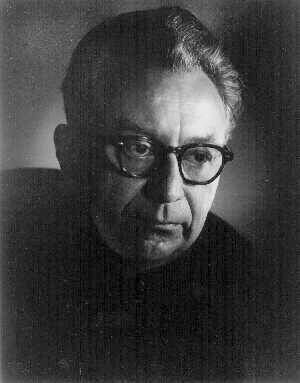
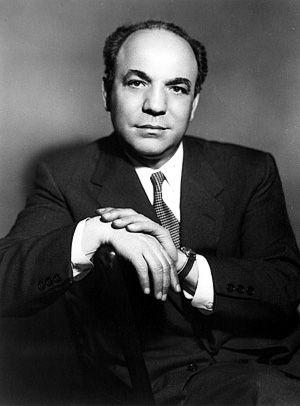
Vincent Persichetti, Paul Creston
Source: Crystal CD (my rip!)
Format: mp3, 320k/s (CBR), ADD Stereo
File Size: 135 MB
Download Link – https://mega.co.nz/#!Z0l2FTya!WMJYZjRbH3q8uocJrYZHuiQeIi4_epGhyVtEfrj HxoI
Enjoy! Don’t share! Buy the original! 🙂
And a word of thanks or a "like" click never hurt a downloader! 😉
Sylvio Lazzari (his real first names were Josef Fortunat Silvester) was born in Bozen, Southern Tyrol,
on 30 December 1857. His father was from Naples, his mother an Austrian. To give in to his parent???s wishes
he interrupted his training as a violinist to study in Innsbruck, Munich and Vienna, where in 1882 he obtained
his doctor???s degree. The same year, during a visit to Paris, following the advice of Ernest Chausson and
Charles Gounod who both had recognized his gifts, Lazzari decided to devote himself entirely to music.
At the Conservatoire he became a pupil of Ernest Guiraud and of C???sar Franck.
In 1894, two years before Lazzari was naturalized as a French citizen, Eug???ne Ysa???e had given the first
performance of the Sonate pour piano et violon, bringing this work to international renown. In 1922,
his Rhapsodie pour violon et orchestre was to be launched by none other than Georges Enesco.
Lazzari???s most important symphonic works are Symphonie en mi b???mol (1907), Tableaux Maritimes
(1920), Effet de Nuit (1890), Marche pour une f???te joyeuse (1903) and, to complete his works for
solo instrument and orchestra, Concertst???ck pour piano (1895). His vocal music includes over fifty works,
either for solo voice (ten songs are available in orchestrated versions), for vocal duet or for chorus and his
chamber music also includes some twenty works for solo piano.
Although Lazzari???s music is influenced by Richard Wagner, Ernest Chausson and C???sar Franck, it is highly
individual in style and of a decidedly more virile temper than those three he considered his masters. It always
sounds uncompromising, well-constructed and mature. Lazzari had a way with absolute, programme and
theatre music, and knew how to write for singers and for instrumental soloists. A predilection for Breton
legends had brought him into contact with the folklore of that region.
Music Composed by Sylvio Lazzari
Played by the Moscow Symphony Orchestra
Conducted by "Adriano"
"This disc continues the Marco Polo label’s practice of finding and resurrecting worthy Romantic-era
music that lay dead for years on library shelves. In this case, they present two orchestral works of
Sylvio Lazzari, a Paris-based Austro-Italian from the Tyrol originally named Josef Fortunat Silvester:
an undated Symphony in E flat and a 1920 work called Tableux maritimes (Maritime Pictures).
This is a worthy pair indeed, especially in the hands of the conductor Adriano (he uses only his surname)
and the Moscow Symphony Orchestra. Performed here, the Tableaux have a coloristic sparkle
(despite the use of a very standard orchestra with only a bass drum in addition to the timpani as percussion).
The taut performance seems full of commitment and understanding, and the orchestral execution is fine.
The ending of the first movement, depicting the sun setting into the sea, is a magical moment.
As for the symphony, one gets the impression that the work is slightly too academic, an odd
coupling of Franckian cyclic form and more nearly impressionistic harmonies. But this listener is not
sure whether this is the fault of the music or a too-formal approach by the conductor."
All Music
Source: Marco Polo CD (my rip!)
Format: mp3, 320k/s (CBR), DDD Stereo
File Size: 184 MB (incl. cover & booklet)
Download Link – https://mega.co.nz/#!0ksSECLS!B4qBhAmm8trYxeP7PACP6Ssyy4IXDcMqvjxdwwv IPK0
Enjoy! Don’t share! Buy the original! 🙂
Thomas Ad???s (*1971) is among the brightest young stars in contemporary composition,
and a musician of broad achievement and influence. His complex and appealing music exhibits
a flair for drama, humor, and personal expression and is notable for the creative use of instrumental
color. Also active as a pianist and conductor, Ad???s divides his time between composition and a
busy performing schedule, as well as teaching at the Royal Academy of Music.
Ad???s’ reputation was secured by his chamber opera, Powder Her Face, Op. 14, a commission
from Almeida Opera for the 1995 Cheltenham Festival. Its premiere, as well as productions in
Germany and the United States, attracted enormous critical attention and praise, and led to a
commission for the 2004 season at Covent Garden (The Tempest, an adaptation of Shakespeare).
His first large-scale orchestral work, Asyla — which was premiered by Simon Rattle and
the Birmingham Symphony Orchestra in 1997 — established Ad???s’ reputation as a composer
of lasting value and individuality.
Nicholas Maw (1935-2009), one of the most highly regarded British composers of his generation,
has written music in a language greatly influenced by the expressionistic style closely associated with
Arnold Schoenberg. Still, it is misleading as well as unduly dismissive of Maw’s singular mode of
expression to categorize him simply as Schoenbergian, or even as expressionistic. Maw’s music,
with its opposition and blending of 12-tone and tonal principles, is better regarded as the multiply
influenced but cohesive creation of a wholly original creative voice.
In 1962, at the age of 26, Maw wrote Scenes and Arias for orchestra and three women’s voices,
the work that established him as a composer of some consequence. Since then, he has composed operas,
sonatas, and chamber, vocal, and choral works, but remains best known for his orchestral music.
From 1973 to 1987 he worked on the immense symphonic poem Odyssey, generally regarded as
his greatest creative achievement. A recording of Odyssey by Simon Rattle and
was nominated for a Grammy award in 1992.
Categories: symphonic/large orchestra, English composers
Style(s): 20th century avantgarde
Music by Thomas Ad???s & Nicholas Maw
Played by the Berliner Philharmoniker & City of Birmigham Symphony Orchestra
Conducted by Sir Simon Rattle
"This is the fourth disc of music by Thomas Ad???s, reaffirming his status as the most brilliantly inventive
British composer of his generation. Ad???s is something of a miniaturist and the 23-minute Asyla,
commissioned for the CBSO in 1997, is, in terms of scale, his biggest work to date (Powder her Face
is longer but scored for smaller forces). The title (the plural of ‘asylum’) is ambivalent, suggesting both
‘refuge’ and ‘madhouse’. Intermittent cowbells epitomise the former, while the latter aspect reaches
its extreme point in the third movement, aptly described by Andrew Porter as ‘a sort of Rite of Spring
cum disco’ — at once exhilarating and disturbing. In the Chamber Symphony, tango and distant
Weberian horncalls combine in the kind of phantasmagorical fantasy Ad???s conjures so well."
BBC Music Magazine
"Like Homer’s, Nicholas Maw’s Odyssey is on a massive scale. It explores the many possibilities
of identity and pleasure in depth, though variations on a rich theme, before resolving to a simple,
restful unison E flat. Simon Rattle, who introduced tonight’s performance with unpatronising clarity,
gave his television series on twentieth-century music the title Leaving home because the century
seems to move away from the tonal and formal securities of classicism and romanticism. Maw,
unusually for a composer of the same generation as Birtwhistle, comes home not to the past
but to the musical conclusion of a complex debate between different forces and temptations.
Maw worked on Odyssey from 1972 to 1985. The course of its movements reflects both the
development of his interest towards tonality in this period and the musical ghosts which a
twentieth-century composer cannot ignore. A tense but texturally diffuse introduction servers
as a long down-beat, followed by a first movement which states and develops a fourty-four
bar theme in distorted classical style. A contrastingly playful second movement, with almost
twee harp interludes, evokes the English musical tradition "from the reign of both Elizabeths",
as Rattle put it, though the dominant spirit is inevitably Britten. The third movement reintroduces
the main theme, transformed, in an extended romantic ramble, in the spirit of Bruckner, with
many unison melodic passages. The fourth movement reintegrates the different traditions
in a dense but excited romp that ends in an explosive epilogue and the quiet coda, where it
all has been heading in both time and tonality.
Each section of Odyssey is introduced by a "time chord", a loose-textured chime with
occasional ticking, based on the sound of a clock that Maw grew up with. If you can spot it,
this is a useful cue that a new section is starting, but the appeal of the work certainly doesn’t
depend on its formal structure, which in any case is too massive to take in on a single hearing.
Rather, the pleasure is in the way Maw builds up musical interest by reinventing familiar
musical ideas from different traditions so that they work in dialogue at many levels towards
a single point. The extended third movement, in particular, contains many enjoyable sections
that flow from each other apparently going nowhere much but actually building up an
underlying sense of purpose and tension.
Simon Rattle commented that Odyssey is a difficult work for the orchestra. It is the longest
work in the standard repertoire, at about ninety-five minutes, and it includes delightful but
demanding solo work for all the sections of the orchestra."
Concerto.Net
Source: EMI CDs (my rip!)
Format: mp3, 320k/s (CBR), DDD Stereo
File Size: 278 MB
Download Link – https://mega.co.nz/#!E0cSGSaa!OuxY1yJEhJ9DMyOEEpd_SxmOmisi61q_TCPTTUm M_Jo
Enjoy! Don’t share! Buy the original! 🙂
Wind, sand, and a dream of flight brought Wilbur and Orville Wright to Kitty Hawk, North Carolina where,
after four years of experimentation, they achieved the first successful airplane flights in 1903. With courage
and perseverance, these self-taught engineers relied on teamwork and application of the scientific process.
What they achieved changed our world forever.
This is a collection of orchestral works celebrating the 100th anniversary of the first flight of the
Wright Brothers. William Bolcom is among the best-known American composers, the others
(Steven Winteregg, Michael Schelle & Robert Xavier Rodriguez) are still waiting to
be discovered by a wider audience.
William Bolcom: Inventing Flight
Steven Winteregg: To Fly Unbounded
Michael Schelle: Wright Flight
Robert X. Rodriguez: The Story of Wilbur and Orville Wright
Categories: symphony orchestra, American composers
Style(s): 20th century tonal/avantgarde
Music by (see above)
Played by the Dayton Philharmonic Orchestra and Chorus
With Allison Janney (narrator) & Andrew Russo (piano)
Conducted by Neil Gittleman
"Neal Gittleman writes: "The Dayton Philharmonic’s Wright Brothers Centennial Commissioning
project dates back to 1997. At that point, more than five years before the actual 100th
anniversary of Wilbur and Orville’s first successful powered flight, it was already clear that
something big was called for. 2003 would also be the Ohio state bicentennial, the orchestra’s
seventieth anniversary and the DPO’s first season in the new Benjamin and Marian Schuster
Performing Arts Center. Given our commitment to the music of today, a major commissioning
effort seemed the way to go, bringing to life four new medium-length pieces addressing the
broad theme of the Wright Brothers. How do you do that? Easy. You find fearless composers
like Bill Bolcom, Robert Rodriguez, Mike Schelle and Steve Winteregg and turn them loose.
They attacked the challenge with the same vigor as Orville and Wilbur tackled the challenges of
powered flight. Technical problems had to be solved. For the Wrights there were issues of
wing and propeller design, inventing a control mechanism, finding a light but powerful motor
and conquering the multidimensional challenges of lift, yaw and roll. For the composers,
there were questions of genre, language, piece-d’occasion – or piece-for-the-ages and "How
many percussionists can I have?" In the end, what made both endeavors successful was
imagination and inventiveness – the imagination to envision the end result and the inventiveness
to make it happen. More than anything else, this CD and the four works it contains reflect
the spirit of Wilbur and Orville Wright, the greatest sons of Ohio’s great city of inventors".
Allison Janney, of The West Wing fame, was raised in Oakwood, a small suburb of Dayton.
She attended Kenyon College in Ohio and landed a role in a play directed by alumnus
Paul Newman. Newman’s wife, Joanne Woodward, encouraged Janney with her acting
and suggested that she consider studying at New York’s Neighborhood Playhouse. She
has won three Emmy awards for her work in television."
Source: Albany Records CD (my rip!)
Format: mp3, 320k/s (CBR), DDD Stereo
File Size: 178 MB (incl. booklet)
Download Link – https://mega.co.nz/#!MdZn2Lia!MAqcDmagYVTOqmMq1O6sfFvubEYuQyYz9Q2JYpS kEms
Enjoy! Don’t share! Buy the original! 🙂
And a word of thanks or a "Like" click never hurt a downloader! 😉
Josephslegende (The Legend of Joseph), Op. 63, is a ballet in one act for the Ballets Russes
based on the story of Potiphar’s Wife, with a book by Hofmannsthal and Kessler and music
by Richard Strauss. Composed in 1912/14, it premiered at the Paris Opera on 14 May 1914.
Hugo von Hofmannsthal first proposed Josephslegende to Strauss as a Zwischenarbeit or ‘interim work’
between Ariadne auf Naxos and Die Frau ohne Schatten. Composition began in June 1912,
but in a letter of 11 September Strauss confided "Joseph isn’t progressing as quickly as I expected. The chaste
Joseph himself isn’t at all up my street, and if a thing bores me I find it difficult to set it to music. This God-seeker
Joseph – he’s going to be a hell of an effort!". Strauss drew on earlier sketches for his abandoned
ballet Die Insel Kythere and wrote for an outsized orchestra with exotic instrumental colouring,
including four harps, organ, celeste, glockenspiel, xylophone, large and small cymbals, four pairs of
castanets, and a double-bass clarinet.
With Diaghilev as impresario, Nijinsky as choreographer and creator of the title role – replaced after his
marriage and fall from grace by Fokine and Massine – costumes by L???on Bakst and Alexandre Benois,
scenic design after Veronese by Josep Maria Sert, and Strauss conducting the premi???re, the initial run
lasted seven performances. This was shortly followed by a further seven in London conducted by Sir
Thomas Beecham, who had loaned the money for the commission to Diaghilev.
This is one of only a handful of complete recordings of the ballet. Most often, conductors have
gone for the suite, which omits about half the material.
Categories: ballet/large orchestra, German composer
Style(s): early 20th century tonal, late romantic
Music Composed by Richard Strauss
Played by the Tokyo Metropolitan Symphony Orchestra
Conducted by Hiroshi Wakasugi
"This is the first complete recording of this rare ballet that was first performed in 1914, then almost
never performed again although it gained good reception from its first performances. If you think that
German composers can be played only by German orchestras, don’t worry: Maestro Wakasugi has been
permanent conductor with the Dresden Staatskapelle, Dresden National Opera and also the
Zurich Tonhalle Orchester before recording this piece. You’ll find all the colors and Strauss-spirit you
might expect from such a huge-proportioned Strauss work."
Amazon Reviewer
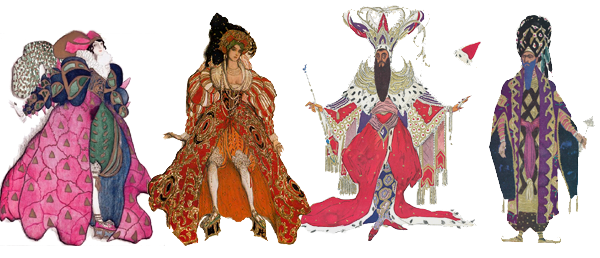
Costume designs for the original "Josephslegende" production.
Source: Denon CD (my rip!)
Format: mp3, 320k/s (CBR), DDD Stereo
File Size: 155 MB
Download Link – https://mega.co.nz/#!x58DUJxY!VLFB5FB9iep1nHFE8QDgQk48k1t1wj88XQDxzpC 06rY
Enjoy! Don’t share! Buy the original! 🙂
Patric Standford was born in 1939 in Yorkshire, England. He studied at the Guildhall School of Music
in London with Edmund Rubbra and Raymond Jones, played the violin and viola in the orchestras and chamber
music classes, and learned the craft of conducting with Lawrence Leonard and Norman de Mar. He won the
1964 Mendelssohn Scholarship which enabled him to extend his studies in Italy with Gianfrancesco Malipiero
and in Poland with Witold Lutoslawski. After gaining a Masters degree at London University, he becamse
involved in the world of commercial music, writing and arranging for films, televsion and West End shows
through which he acquired practical experience and skills he has always valued. During this time he made
several recordings as a conductor of light music, including an album for the jazz group Continuum which
he cmposed and directed. During the 1970s he established himself as a concert composer with his
Symphony No.1 (The Seasons), which was awarded the Premio Citta de Trieste, a Cello Concerto
(a homage to Brahms), and significantly the oratorio ‘Christus Requiem’ which drew wide critical acclaim,
including the ‘Yugoslavian Government Arts Award’ after a performance in Skopje. His Symphony No.3
(Toward Paradise) was awarded the 1985 City of Geneva Ernst Ansermet Prize, and in 1997 he received
the First International Composers’ Award of Budapest for his choral masque The Prayer of Saint Francis.
In 1999 he was awarded the first prize of the Belgian International ClarinetFest for his Clarinet Quintet.
Symphony No.5 was commissioned for the BBC Philharmonic in 1986. His choral works attracted
many European performances, and he became a frequent visitor to France (Tours), Hungary (Budapest and
Debrecen) and Estonia (Tallinn) as a jury member for International Choral Festivals. He was professor of
composition at the Guildhall School of Music until 1980, when he was appointed Head of the Music School
at Bretton Hall, a college of Leeds University. He has also played a major role with many British organisations.
Categories: symphonic/large orchestra, English composer
Style(s): early 20th century tonal, advanced tonality
Music Composed by Patric Standford
Played by the Royal Scottish National Orchestra
With Raphael Wallfisch (cello)
Conducted by David Llloyd-Jones
"This CD contains some substantial works by a relatively unknown British Composer. From the accompanying
booklet I see that his tutors were Edmund Rubbra, Malipiero and Lutoslawski. He did not imitate his tutors
and there is least evidence of their influence.
His first symphony was his third attempt at writing it and it is scored for a large orchestra. There are four
movements depicting the four seasons. Not a bit like Beethoven’s Pastoral Symphony. this spring is not like
a typical British one, but rather like a Russian one. This is strong vigorous music, the writing is busy, yet
the textures are never overloaded. An interesting piece of orchestral writing. Well worth a listen.
The Cello concerto played by Raphael Wallfisch is a homage to Brahms and is built around the fifth movement
of his German Requiem.Written in 1974, it sems that to date this is his only full scale concerto. Beautiful
music. This should be on programmes for Recorded Music Societies and U3A Music Appreciation Groups.
Finally the disc ends with "Naiades", this was originally a movement from Stanford’s Second Symphony.
The Naiades were mythological water nymphs, therefore the music is light and airy. Fast and busy
throughout. this is delightful with sustained delicacy and dexterity.
Thes pieces are well worth investigating and The Royal Scottish National Orchestra under David Lloyd Jones
have made my enjoyment of this music all the better by an excellent sound recording. We are indebted
to The British Music Society for issuing it."
Music Web
Source: BMS CD (my rip!)
Format: mp3, 320k/s (CBR), DDD Stereo
File Size: 183 MB (incl. booklet)
Download Link – https://mega.co.nz/#!V5UVHAbL!X7Sa-UFdTAE18936DMZhzwHFms8hSsPNUj5wvCLe5nI
Enjoy! Don’t share! Buy the original! 🙂
And a word of thanks of a "Like" click never hurt a downloader! 😉
K???s???ak (aka Kosaku) Yamada belongs to the group of the first fullyfledged composers that Japan produced. He was also a
prominent conductor, organizer, and leader of the Japanese music world. As a great pioneer, he played a
definitive r???le in helping Western music take root in Japan. In the 1860s, after 250 years of isolation, Japan
restored extensive contacts with Western civilization, including music.
Yamada’s studies in Berlin with Max Bruch were quite fruitful and significant. He absorbed everything he could in Berlin,
while continuing to study academic harmony and counterpoint at school. During this Berlin period, he
made a series of epoch-making achievements in Japanese music history. Yamada’s predecessors had
been attempting pieces for wind band, sonatas for solo instruments and piano-accompanied songs, but Yamada
surpassed them in Germany, where he created orchestral pieces, a symphony, symphonic poems and a
full-scale opera (Heavenly Maiden fallen to Earth), all of which were the first-ever attempts of their
kind by a Japanese composer.
The Symphony in F Major ‘Triumph and Peace’, which amounts to the first-ever symphony by a
Japanese composer, was completed on 8th November 1912. It may be that the symphony initially had no title
and was given the name after the outbreak of World War I in 1914. In any case, the work is true to its name.
It contrasts and unites the triumphant hymn to victory and a calm prayer for peace. A pair of musical
memories of high-spirited military music and devout hymns in his early days in Yokosuka has now grown
into this symphony. Yamada was strongly attached to the Gagaku-like, beautiful
melody of Kimigayo, which meant to him a symbol of the strength and sublimity of Japan, and a link between
‘triumph’ and ‘peace’. All his life he continued to use the melody of Kimigayo or its fragmented motifs in
many of his works, as a metaphor for Japan.
The two symphonic poems The Dark Gate and Madara No Hana (Mandarava) were written in the
same period. The former was started about March 1913 and was completed in October of the same year, while
the latter was started in July and was finished in November. The Dark Gate is based on a poem of the same title
by Rofu Miki, a Japanese poet stimulated by European Symbolism. The story is as follows:
There are many blind people in a room, and there is a big dark gate in front of them. The blind, driven by
uneasiness, knock on the door violently. But the gate does not move at all. One of the blind men murmurs that
they might die. All the people stop talking and silence reigns. Meanwhile some begin to cry, yet the gate is
kept closed. Madara No Hana is based on a poem of the same title by Kazo Saito, Yamada’s close friend, who showed
versatility in music composition, architecture, painting, design of furniture and clothes. Saito studied in Berlin
during the same period as Yamada, and was influenced by Kandinsky and Bruno Taut. “Madara no hana”
denotes beautiful flowers growing in Buddhist Heaven. The poem reads as follows: "The sun is shining red in the night. I see the lights of
the palace and an old man washing his eyes in the lake. I walk about this strange land. Then the old man passes
me by and hurries to the palace. I walk after him only to lose sight of him. Feeling isolated and crying, I still go
on walking and come up to a place, where madara no hanas lie scattered on the ground. The palace in the
distance now shines brightly and I am enchanted by its beauty. But soon after that, it gets dark and only
madara no hanas continue to go."
Categories: symphonic/large orchestra, Japanese composer
Style(s): late romantic, impressionistic
Music Composed by Koscak Yamada
Played by the Ulster & New Zealand Symphony Orchestras
Conducted by Takuo Yuasa
"In 1912, a 26-year-old music student from the provinces attending the Musikhochschule in
Berlin turned out a well-composed and very conventional overture and four-movement symphony
for his theory class. In 1913, the same student wrote two very progressive, very expressive,
and very mystical symphonic poems for himself and a handful of like-minded friends. Not, one
would imagine, a singular story in the heady days and decadent nights of fin de si???cle Berlin except
that in this case the province in question was Japan, the composer in question was named
Kosaku Yamada, and the works are the first overture, the first symphony, and the first
symphonic poems ever composed by someone of Japanese descent.
That Yamada’s Overture and Symphony are conventional and inconsequential works is hardly
surprising: after all, he composed them for class. And that Yamada’s The Dark Circle and Madara
No Hana are progressive and expressive works is hardly surprising: after all, he wrote them for
himself. But that symphonic poems should be so weirdly radiant; so luminously colored; so
achingly, longingly, yearningly mystical is certainly surprising and that they should be so convincing
and even compelling is astounding. Yamada’s Madara No Hana, the flowers in Buddhist Heaven,
is an exquisitely beautiful work of serene ecstasy. The conducting of Takuo Yuasa is lucid, the
playing of the Ulster Orchestra and the New Zealand Symphony Orchestra is clean, the recording
of Naxos is clear, and the uncanny light of Yamada’s Madara No Hana shines through."
All Music
Source: Naxos CD (my rip!)
Format: mp3, 320k/s (CBR), DDD Stereo
File Size: 139 MB (incl. cover, booklet)
Download Link – https://mega.co.nz/#!5lFzjSrL!GCyuXXp6mvL_Vk3AFKfzVxr-Iz9bEjWqx-xB4jmClTs
Enjoy! Don’t share! Buy the original! 🙂
I have to listen several times…thx a lot for this!
No.408
Aarre Merikanto (29 June 1893, Helsinki, Grand Duchy of Finland – 29 September 1958, Helsinki, Republic of Finland)
was a Finnish composer. He was the son of Liisa H???yrynen and the famous romantic composer, professor Oskar Merikanto.
His childhood he spent in Vilppula, Finland. From year 1919, he was married to Meri Gr???nmark. He is considered a key figure
in early Finnish modernism (together with V???in??? Raitio and Ernest Pingoud) and several of his works, most notably the opera
Juha, have obtained posthumous attention. As professor of composition in the Sibelius Academy (1951-1958) Merikanto
taught several Finnish composers of the next generation, including Einojuhani Rautavaara, Usko Meril???inen, Aulis Sallinen
and Paavo Heininen.
He studied music in Helsinki 1911, Leipzig 1912–1914 and Moscow 1916–1917. Merikanto’s early style was rooted in
Finnish romanticism, but in the 1920s he developed a personal, atonal but not dodecaphonic Modernist style. The reception
of Merikanto’s works of this period was mixed: the "Schott" Concerto for nine instruments was awarded in a competition
organized by the German publishers Schott & S???hne, but his domestic Finnish audiences and critics were generally
unenthusiastic and his opera Juha, today considered one of his major works, was never performed during Merikanto’s
lifetime. Disappointed with the reactions, starting in the early 1930s, Merikanto gradually abandoned his more radical style
and turned towards a more traditional idiom based on Neoclassicism. He also destroyed or mutilated the scores of
several works from his earlier style period, some of which were later reconstructed by his composition student
Paavo Heininen. Merikanto was diagnosed with lung cancer in the summer 1957, and he died the next year.
The works recorded here are from different phases in Merikanto’s career. The symphonic poem Pan, suggestive, sweeping
and explosive by turns, and the ambitious Genesis for soprano, chorus and orchestra are the major works.
Categories: symphonic/large orchestra, Finnish composer
Style(s): 20th century advanced tonality
Music Composed by Aarre Merikanto
Played by the London Sinfonietta, Finnish Radio & Lahti Symphony Orchestras
With Anssi Karttuunen (cello), Karita Mattila (soprano)
And the Savonlinna Opera Festival Choir
Conducted by Esa Pekka-Salonen, Leif Segerstam, Jukka-Pekka Saraste & Ulf S???derblom
"Pan – Symphonic Poem for Orchestra, op.28: Merikanto’s impressionistic portrayal of the goat-hoofed forest
god is one of his best known, and more successful, orchestral compositions. Initial reactions to the work were
mixed with many believing that the schizophrenic use of folk-like dance elements in combination with forest
murmurs echoing Wagner were not a sign of maturity. For sheer boldness and subtle use of instrumental color,
Pan must be ranked as one of the more innovative Finnish orchestral works of the early 20th-century.
The playful but elusive flute line that weaves through the work give us a perplexing look at the shenanigans
of the strange creature. This work proved to be an important predesessor to Finnish modernism with its
fearless use of new techniques while managing to stay well within the post-Romantic Scandanavian tradition."
All Music
Source: Finlandia CD (my rip!)
Format: mp3, 320k/s (CBR), DDD Stereo
File Size: 176 MB
Download Link – https://mega.co.nz/#!wgcRFSyI!VmN-XVf2XwGo7GfyD3c8ujJ-1DNcNCCLksKxgAvmqTQ
Enjoy! Don’t share! Buy the original! 🙂
This is a delightful collection of Flemish rhapsodies (five of the six works even bear that same title)
by Belgian composers, and the Frenchman Albert Roussel. You’l find more details about the
composers and the works in the review below.
Categories: symphonic/large orchestra, Belgian & French composers
Style(s): 20th century, late romantic, neo-classical
Music by Michel Brusselmanns, Maurice Schoemaker, Marinus de Jong
And Jean Absil & Albert Roussel
Played by the Belgian Radio and Television Philharmonic Orchestra
Conducted by Alexander Rahbari
"To be honest, if I had read about this disk I might think it to be some kind of April fool.
After all, a disk called Flemish Rhapsody containing five works with the same title might seem to be rather
over–egging the pudding. But this is no jest, for here are six very enjoyable, and colourful, works
from composers whose names, with, possibly, two exceptions, will be new to you.
Brusselmanns was born in Paris, but studied with Paul Gilson – probably the first Flemish composer
to compose a rhapsody for orchestra – Scottish Rhapsody (1886) – at the Brussels Conservatoire.
He remained an isolated figure all his life. This Flemish Rhapsody is not based on any folk material,
but that hardly matters for it’s a cogently conceived work, full of brilliant orchestration. There’s a
particularly melting section for cor anglais about half–way through – and good (original) tunes.
Why have we never heard this piece before? It’s got real charm and quite a bit of cheekiness about
it, and some of the orchestration sounds a little like Constant Lambert! This is super stuff –
a joy from beginning to end.
Schoemaker also studied with Gilson, as well as having lessons in counterpoint from Brusselmanns.
He uses two folk tunes – a boisterous theme for the beginning and end and a slower, dreamier,
idea for the relaxed, and contrasting, middle section. Perhaps not as colourful in its orchestration
as the previous piece it is just as enjoyable.
Marinus de Jong was Dutch by birth but after studying in Antwerp he took Belgian citizenship
and started his musical career as a virtuoso pianist. This work uses a number of folksongs and is
in a freer, more rhapsodic, form than the earlier works. It’s restrained and discreet, nothing really
festive about this music – it seems worthy rather than worthwhile.
Jean Absil was a Walloon and his wife came from Ghent, which is probably the reason for this
work. Using four folksongs – one with the wonderful title The sneaky fisherman – this is a very
fresh and delightful piece of light music. It sports luminous orchestration, well worked out ideas
and is reminiscent of the lovely way that Grace Williams uses the Welsh Nursery Songs in her
Fantasia on that material.
Albert Roussel was born in Tourcoing, which is just on the French side of the border with Belgium,
so it’s not too unusual to expect him to have written this work. Using five 16th and 17th
century Flemish tunes, Roussel creates a piece like the Absil, unpretentious and enjoyable.
Finally, August de Boeck’s Dahomeyan Rhapsody, the earliest work here which, strangely, is
very reminiscent of Delius Dance Rhapsodies, yet it predates both of them by quite some time!
This piece is a lovely romp and nothing else.
This is a most enjoyable collection of unknown pieces in very fine performances and is well
worth investigating because the music is so delightful. The recorded sound is bright and clear
and the notes in the booklet, are in Flemish, French, German and English. In general these are
very optimistic pieces whose only desire is to entertain. You can’t ask for more than that
from a piece of music."
Musicweb
Source: Discover CD (my rip!)
Format: mp3, 320k/s (CBR), DDD Stereo
File Size: 137 MB
Download Link – https://mega.co.nz/#!RgVQgTqA!D-nCZjyCXlUfj7TbYR-Mdn1RENRAM1pOFKVrfEvYlXg
Enjoy! Don’t share! Buy the original! 🙂
This is truly a "mixed bag" of shorter English orchestral works, grabbed from various
different original releases on the famous Lyrita label. Francis Chagrin (Helter Skelter),
Malcolm Arnold (Beckus the Dandipratt) and Alan Rawsthorne (Fantasy Overture: Cort???ges)
also wrote film scores, while David Morgan (Contrasts) and Peter Warlock (Serenade)
focused on concert music, and Henry Hugo Pierson (Macbeth) simply did not live to
see motion pictures emerging. Details about these works you can find in the review below.
Music by (see above)
Played by the Royal & London Philharmonic & London Symphony Orchestras
Conducted by Barry Wordsworth, Vernon Handley, John Pritchard
And Nicholas Braithwaite
"This CD has three key elements. Firstly there are three works that have been swept up
from previous reissue projects at Lyrita. These include the Comedy Overture, Beckus the Dandipratt
by Arnold, Chagrin???s Helter Skelter and Warlock???s Serenade for Frederick Delius. Contrasts ??? the
highlight of this CD – by David Morgan was from an LP devoted to his music (SRCS 97). Incidentally,
I wonder what has happened to the same composer???s Violin Concerto from that disc? And thirdly
there are two new offerings from the Lyrita archive: Pierson’s Macbeth and the Rawsthorne???s
Cort???ges have not been issued on this label before.
The first work is by the largely forgotten composer Henry Hugo Pierson. This was written in 1869
at a time which traditionally has been regarded as a downbeat period in English musical history ???
???The Land without Music???[see]. This work categorically disproves the sentiment of that myth. Pierson,
originally spelt ???Pearson???, was born in Oxford in 1816. After a good classical education at Harrow
School and Trinity College, Cambridge he studied music in England and Germany. In 1844 he accepted
the post of Professor of Music at Edinburgh University. However most of his life was spent in
Germany, where he died in Leipzig in 1873. He wrote a number of works in different genres, but he
is perhaps noted for his choral music, songs and stage works. Grove mentions only a handful of
pieces for orchestra besides the present work. These include a Romantic Overture, Hamlet: funeral
march, and a handful of overtures, including Romeo and Juliet and The Maid of Orleans. The Romeo
and Juliet Overture was recorded on Hyperion CDH55088.
There are a number of things that need to be said about this present work. Firstly, although the
composer annotated his score with quotations and ???stage directions??? it is not necessary to follow
the plot of ???The Scottish Play??? to appreciate this work. Secondly, the orchestration is impressive; without
going overboard it is fair to say that Pierson was manifestly a master of his art. Thirdly, this is a major
work lasting some twenty minutes. At the back of my mind was the fear that the interest of the
music could not be maintained. Somehow the residual prejudice that exists about ???Victorian??? music made
me doubt whether the invention and integrity of this composer???s tone poem would hold up. The
reality is that from the first note to the last, Pierson holds our attention and interest. There are
considerable mood changes to catch the imagination – from the witches??? incantations through Lady
Macbeth???s death. We also hear the marching English army and a musical representation of the ???dagger???
scene. The only problem is that much of this music is frankly quite beautiful as opposed to sinister or
macabre: and one would be tempted to put Duncan, Banquo et al to one side and just enjoy the tunes.
Yet the piece does work as a tone poem and well deserves our attention. It is, in reality, a minor
masterpiece and the sooner we hold up our hands and recognise this, the better. Pierson, along with
Macfarren, Sullivan, Corder and possibly Prout are considerable composers in their own right and
must not be relegated to also-rans under the overpowering shade of Sir Edward Elgar.
I have never heard David Morgan???s Contrasts properly. Let me explain. I did have the original vinyl
LP in my collection ??? but I bought it second hand. I guess someone must have had it on the beach,
because the sound quality is dreadful. Try as I did, I could not clean the sand from the groove. The
Violin Concerto awaits my pleasure for the same reason. I cannot imagine why someone would want
to use this album as a Frisbee on Morecambe Beach ??? but that seems to have been the case. A bad
buy! So I was delighted to hear Contrasts on CD. And what a wonderful work I have missed.
I know virtually nothing about the composer ??? currently I have a note on MusicWeb???s bulletin board
for information, with no success. I do know that he studied with the late Dr Alan Bush and Leighton
Lucas. Morgan was born in 1933 and has written a Sinfonia da Requiem, the above mentioned
Violin Concerto and a number of chamber and instrumental music. He does not feature in New Grove.
Therefore, I depend on Paul Conway???s programme notes for my understanding of this work.
David Morgan composed Contrasts in the autumn of 1974. He dedicated it to the memory of
Shostakovich. The composer has described the composition as "a deliberate contrast in duality:
it consists of two disparate movements, each based on the same two themes, constantly varied
throughout the piece." The first movement is over sixteen minutes long whereas the second is
only five. Yet there is no apparent formal or aural imbalance.
It could be concluded that this work is in fact a two movement symphony ??? there are plenty of
precedents for that particular form. Or perhaps, as Conway suggests, it is a ???Concerto for Orchestra???.
Whatever the formal underpinning of this work, it is undoubtedly a fantastic piece. The emotional range
is tremendous, without being confusing or overbearing. The musical style is always approachable
without being simplistic or pass???. It is possible to hear bitterness, reflection and joie de vivre in these
pages: it is moving and exciting and enjoyable at the same time. The balance is perfect: the
orchestration is masterly. I cannot imagine why a work of this calibre and quality is unknown. I would
actually give reams of Shostakovich to possess David Morgan???s tribute to the elder composer.
Finally, I hope that Lyrita will re-release the Violin Concerto as soon as possible.
It surprises me that Alan Rawsthorne???s Cort???ges is even less well known than most of his works.
In spite of some negative criticism in the Musical Times this is a striking essay that impresses by the
skill of its form and the variety of its instrumentation. The title was queried by the contemporary MT
reviewer "Why in French?" I am not sure; perhaps the composer wanted to emphasise the ???funereal??? as
well as the ???triumphant??? ??? which would be less obvious if he had called it ???Processionals???? It is divided
into two main parts ??? the first is more in the line of a lament and the latter that of celebration ??? but
not untinged with reflection. Paul Conway notes allusions to Mahler in the first half of the work and
suggests that Rawsthorne was able skilfully to combine epic material with intimate moments. The
second section of this overture literally sparkles: the mood has changed out of all recognition. The
work was described in the Musical Times as a ???packet of procession snap-shots, mostly cheerful in
our inconsequential English way, but not very original ???" I think this is being disingenuous although I
wholeheartedly agree with the ???snap-shot??? allusion. This is a good overture that was quite definitely
a work of its era. Conway concludes his notes by suggesting that this piece is no less appealing than
the better known Street Corner Overture (1944) although he notes, correctly, that it is more
ambitious and wide-ranging.
I remember my friend John coming into the music department at my ???High School??? and announcing
that Francis Chagrin was dead. Now I must confess that I had not heard of the composer and was
not sure if ???it??? was male or female. However I was soon apprised that Chagrin???s great claim to fame
was that he wrote the music to the Colditz Story. Later explorations have revealed that he composed
three symphonies, a piano concerto and a deal of other music. I have never heard these ???symphonic???
works and I guess that few people have. It is perhaps difficult to deduce the value of a composer???s
???serious??? music from the present Concert Overture. However, even the most cursory hearings of
Helter Skelter reveals a composer who delighted in fine melodies, superb orchestration and
interesting harmonies. This piece is quite definitely a crowd-puller and I have often wondered
why it does not feature in concert programmes as a ???curtain raiser???. Surely Chagrin???s non-film
music is long overdue exploration and revival.
Of course, Warlock was a great enthusiast of Frederick Delius. He wrote an impressive biography
on the composer. The Serenade was written between 1921 and 1922 as a tribute to the elder
composer on his sixtieth birthday. I have always viewed this lovely piece as being more Delius-like
than the man himself ever penned! It is certainly a fine tribute, yet somehow it cannot be defined as
pastiche. There are elements of Warlock???s art present and correct in a number of places, yet nothing
quite as Spartan as The Curlew is found in these pages. Gorgeous is not an immoderate adjective
to use for this piece. It has been one of my Desert Island Discs for over a third of a century!
Arnold???s overture was written in 1943 and is generally considered to be his first definitive work. It is a
portrait of a street urchin. Interestingly ???dandipratt??? was an archaic name for a waif. The programme
notes point out that although the piece is entitled ???Comedy Overture???, Beckus is a deeper piece
than the title suggests. It develops as a set variations on two themes through a number of adventures
and misadventures – some being a little sinister. Beckus could be seen as a kind of youthful Till
Eulenspiegel. The attentive listener will recognize a number of Arnoldian fingerprints. It is quite
definitely one of the foundation works of the composer???s musical canon.
This is a great ???compilation??? and deserves to be popular. It balances works that are relatively well
known with one that has been ignored for generations and one that just demands recognition. Most
of the pieces are available elsewhere, and I guess British music enthusiasts will have these alternative
recordings. My bottom line is that this CD is well worth the price for the Pierson and more especially
for the David Morgan alone. The other five works are attractive and interesting additions to
this ???must have??? CD."
Musicweb
Source: Lyrita CD (my rip!)
Format: mp3, 320k/s (CBR), ADD/DDD Stereo
File Size: 180 MB
Download Link – https://mega.co.nz/#!4kshxY4T!F5QQbSeqOqBqethVgBGaY1PH4cIpKxfgfFZfEL_ e0IY
Enjoy! Don’t share! Buy the original! 🙂
And don’t forget the uploader. 😉
Alexander Scriabin’s Symphony No.3 in C minor, entitled Le Divin Po???me (The Divine Poem), was
written between 1902 and 1904 and published in about 1904 – just before Rachmaninoff embarked on his Second
Symphony, Scriabin???s Third is comparable in scale with that work, but on a wholly different visionary level.
At the time he was under the spell of the cult philosopher Tatiana de Schloezer, who nurtured in him a self-image as
a divine creator. For him, music now represented a sensory and sensual reaching-out to experiences beyond the
prosaic ??? the abstract symphony became a ???poem???.
Scriabin sometimes referred to The Poem of Ecstasy as his "fourth symphony", although it was never
officially called such and avoids the traditional division into separate movements. Although played as a single
movement, there are traces of the classical sonata key-scheme that Scriabin had employed previously, but it is
no longer structurally important. Scriabin wrote a long poem to accompany, but not be recited with, the music.
It ends with, "I am a moment illuminating eternity….I am affirmation…I am ecstasy." Scriabin professed to
evaluate music as being the most highly evolved of all the human arts. He also claimed that the emotion of ecstasy
was the most highly evolved of all the human emotions. The Poem of Ecstasy attempts to combine these two
aesthetic principles.
R???verie of 1898 was Scriabin’s first orchestral work. In November 1898, when Scriabin went to Saint
Petersburg, he brought a present for his patron and publisher M.P. Bela???eff. The offer was the full score of an
orchestral work named "Pr???lude", a short miniature in E minor and ternary form. Since Bela???eff thought the
French title Pr???lude did not fit an orchestral work, he and Scriabin decided to rename it R???verie.
Music Composed by Alexander Scriabin
Played by the Deutsches Symphonie-Orchester Berlin
Conducted by Vladimir Ashkenazy
"Both as pianist and conductor Vladimir Ashkenazy always has struck me as one of our greatest
musical intellects; yet, especially as he has matured, I often have found his performances lacking in all-
out passion. However, this set of Scriabin symphonies finds him pulling out all the stops and turning in
heated performances, guided by his ever-evident intelligence. These works contain two moments that
typify arch romanticism: the gushing second allegro of the six-movement First symphony, and the
romantic/heroic finale of the Second. Ashkenazy brings unusual fire and forward momentum to these
sections, making these readings the preferred ones. If not quite in that definitive league, his Third
symphony is as good as any in the catalog, and the Fourth (better known as The Poem of Ecstasy)
is more than respectable. The Berlin orchestras play with verve and virtuoso flair; the soloists have
ideal voices, and the recorded sound is excellent."
Classics Today
Source: Decca CD (my rip!)
Format: mp3, 320k/s (CBR), DDD Stereo
File Size: 161 MB
Download Link – https://mega.co.nz/#!cgVTgRwR!GYVf4lPRagsJmnNWnCDqhwzptCln_AaaOwUsiKN mVrU
Enjoy! Don’t share! Buy the original! 🙂
And don’t forget your friendly uploader! 😉
The Australian composer, conductor and teacher Alfred Hill (1869-1960) studied in Leipzig in the late 1880s,
continuing, as a composer, the traditions in which he had been trained, writing music that suggests the work of a
latter-day Australian Dvoř???k. His early musical employment was in New Zealand; he moved back to Australia in
1897, involving himself in opera and operetta, and teaching at the New South Wales State Conservatory until a
dispute led to his resignation in 1934. Hill???s works for the theatre include a number of romantic comic operas,
principally staged in Sydney. His instrumental music sometimes reflects his interest in aboriginal melodies.
The 3rd Symphony, subtitled "Australia" (with material derived from an earlier string quartet), is cast
in the usual four movements; each one carries a programmatic header: I. Introduction (The Lonely, Silent Land) –
Allegro (a. The Workers – b. The Thinkers); II. Australia, mysterious and beautiful; III. The Aborigines; IV.
The Challenge. Like Dvor???k before, Hill works several folk motifs into his score, but filtered through the rigid
technique he was taught in Germany. The 7th Symphony does not seem to have programmatic connotations.
Also included are two symphonic poems: The short, lyrical The Moon’s Golden Horn, and the 15-minute, ambitious
The Lost Hunter, for which Hill wrote an extensive narrative (which you can find in the accompanying booklet.
Music Composed by Alfred Hill
Played by the Queensland Symphony Orchestra
Conducted by Wilfred Lehmann
"The Australia Symphony was recorded by Australian EMI on OALP 7524 with the Sydney SO conducted by
Henry Krips. This was a tape of a concert performance given on 16 December 1959 on Hill’s 89th birthday.
Hill was to die the following year. The symphony is in four movements the first of which takes Schumann
(Symphonies 1 and 2) and Tchaikovsky (Symphony 5) as models in music of elegant and romantic ease.
The adagio is of an eerie beauty while the third movement (Arnhem Land – Hill’s wife Mirrie wrote a whole
symphony with this title and this too was performed by Henry Krips and the Sydney SO) is alternately
stirring and dreamily wandering in the manner of Tchaikovsky 4. The finale has a silvery lunar romance
and bubbling vitality with fine work for the strings.
The Seventh Symphony’s first movement is glowingly romantic and of a long-lying thematic richness.
Hill was clearly a most fastidious orchestrator as there is never any blur; instead we are treated to
music of Elysian tenderness. The second movement is redolent of Grieg (The Last Spring). The bustling
presto third movement is Brahmsian and playful. The fourth movement chuckles with Brahmsian bustle
and even a most unusual hint of Franz Schmidt (Hussar Song).
The Lost Hunter is light on the aural palate and its opening bars resound to ppp fanfares echoing around
the glistening ramparts of morning. Here he seems to have cast off Schumann and instead resorted
to a languid nature mysticism not so far a remove from Bax’s Spring Fire. Karelia’s alla marcia is
suggested by the lithe music at 5.00 and Richard Strauss in the jollity of the final five minutes. The Moon’s
Golden Horn might well be described as Leipzig impressionism: somewhat of a static idyll of quietly
simmering ecstasy."
Musicweb
Source: Marco Polo CD (my rip!)
Format: mp3, 320k/s (CBR), DDD Stereo
File Size: 156 MB (incl. cover, booklet)
Download Link – https://mega.co.nz/#!U9UHmARI!ZqJig3emJxqv3aaj6o8BhG_RRGZho4dQ4_TzXpJ vOTQ
Enjoy! Don’t share! Buy the original! 🙂
Alfredo Casella’s Paganiniana is a divertimento for orchestra composed in 1942, based on
themes by Niccol??? Paganini. The piece was composed to honor the centenary of the Vienna Philharmonic,
which gave its premiere in March 1942, under the direction of Karl B???hm. It is in four movements: I. Allegro agitato
– II. Polachetta – III. Romanza – IV. Tarantella. The first movement is meant to portray the "satanic spirit of the
great violinist", and uses four main themes, taken from Paganini’s Caprices Nos. 8, 12, 16, and 19. The
second, more melancholy, movement is derived from Paganini’s Quartet No. 4 for violin, viola, cello, and
guitar. The third movement takes its subject from an unpublished work, appearing first as a duet for solo
violin and clarinet. The finale is taken once again from the quarted, borrowing also from an unpublished
dance for violin and small orchestra.
Casella had his biggest success with the ballet La Giara (The Jar), set to a scenario by Pirandello.
The story is set in a farmhouse where the landowner (Don Lol???) orders a very large clay pot for his olive
oil, but the new vessel breakes almost immediately under mysterious circumstances. The great "Jar-fixer"
Z??? Dima, famous for his invention of secret and powerful glue, is called to repair the jar. Z??? Dima manages
to repair it but new, comical situations arise and the intervention of a lawyer is required. When he thinks he has
found the solution he is confronted with a new yet another turn of events. Casella supplies the expected
colour and playfulness for this subject, neo-classical style.
Music Comosed by Alfredo Casella
Played by the Orchestra della Svizzera Italiana
Conducted by Christian Benda
"Alfredo Casella (1883-1947) was a major composer who is only now beginning to receive some of
the recognition that he deserves. The reasons for his neglect seem to be more political than musical:
he apparently enjoyed cozy relations with Mussolini’s regime, which led to his ostracism after the
war. However justified that may have been at the time, there’s no reason now not to enjoy the music
of this immensely talented and thoroughly diverting composer. “Paganiniana” is, as the title implies,
a suite of pieces based on the works of the famous violin virtuoso, while the “Serenata” is a charming
neo-classical dance suite that ends with a bracing finale “alla Napoletana.” The program concludes
with another luminous and rhythmically infectious dance selection, this time a suite from the
ballet “La Giara” (after the story by Pirandello). The performances are as delightful as the music.
Now on to the symphonies, please!"
Classics Today
Source: Naxos CD (my rip!)
Format: mp3, 320k/s (CBR), DDD Stereo
File Size: 145 MB (incl. cover, booklet)
Download Link – https://mega.co.nz/#!sFwyUSqJ!dqworHtDLdngpw4mktZbDnfW8TNnz448s7S126t ClUI
Enjoy! Don’t share! Buy the original! 🙂
It was during his studies in Germany the versatile and expansive Swedish composer Andreas Hall???n
became a great Richard Wagner enthusiast ??? as clearly revealed in his first opera Harald der Wiking ???
Hall???n’s foremost achievements were made in the world of the opera but he also created several neo-
romantic orchestral works, among them being his Toteninsel and Rhapsody No.2. Hall???n’s
attraction to the Nordic theme and nationalistic tone can be seen here. In an epoch of musical pioneering
such as during the 1890???s in Sweden, Andreas Hall???n is a reflection of contemporary currents.
Hall???n???s music is however far too diversified to be covered by labels like "neo-romantic". He was a typical
representative of his era which makes it difficult to evaluate his position of the musical life of that time –
the extent to which he contributed to the powerful growth of new ideas in the Swedish musical life during
the 1890???s. Perhaps he can be counted among the pioneers as regards orchestral timbre and the free
orchestral pieces. The Wagner elements are certainly very evident in the works recorded here: the suite
of symphonic tableaux, Gustav Wasa’s Saga, the shorter descriptive pieces Ethereal Sounds, Summer
Glow and In Autumn, as well as the Romance for violin and orchestra.
Music Composed by Andreas Hall???n
Played by the G???vle Symphony Orchestra
With Peter Olofsson (violin)
Conducted by Christopher Fifield
"Certain composers, who during their lifetime have been frequently performed and highly regarded,
tend to slip into oblivion after their death. Others, sometimes not very successful in contemporary
musical life, grow in reputation when they are gone.
Swedish composer, conductor, critic and teacher Andreas Hall???n certainly belongs to the former category.
Born in Gothenburg on 22 December 1846 he was early recognized as a great musical talent. He received
his first musical training from the cathedral organist in his hometown, Seldener, and was soon able
to stand in for his teacher. He then moved to Germany for more advanced studies, where Reinecke in
Leipzig, Rheinberger in Munich and Julius Rietz in Dresden were his teachers. After a couple of years in
Gothenburg, where he re-organized the Musical Society and formed a New Choral Society and performed
big choral works ??? Mendelssohn???s Elijah and Verdi???s Requiem among them ??? he returned to Germany,
mainly due to conflicts caused by his terrible temper and unwillingness to compromise. During the
years 1879???1883 he worked as a singing teacher and got to know more about current European
music life than any other Swedish composer ??? not least he got hooked on Wagner. On his return to
Sweden he settled in Stockholm, where, apart from a few years in the south of Sweden, he stayed
for the rest of his life. He founded the Philharmonic Society and was the person who, probably more
than anyone else, established Sweden as a country of choral singing. He gave the first Swedish
performances of Bach???s St. Matthew Passion. He also served as conductor at the Royal Opera.
As music critic as well as composition teacher, where he could count among his pupils Oskar Lindberg
and Kurt Atterberg, he was stubbornly conservative. This was after the turn of the century; in his
early years he was rather criticized for being too modern. He is regarded as the first Swedish Wagnerian,
which is not very apparent from the music on this disc but is more obvious in his operas where he
uses leitmotifs. He composed several operas, the first, Harald the Viking premiered in Leipzig in 1881,
conducted by Arthur Nikisch. His most successful work was Waldemarsskatten (Valdemar???s Treasure)
in 1899, based on the medieval event when Danish king Valdemar Atterdag plundered and burned
Visby. It was played no less than sixty times at the Royal Opera and later also in Karlruhe. Among
his other works can be mentioned a Christmas Oratorio (recorded and available on Sterling CDS
1028-2) and a large oeuvre of orchestral music. He wrote no symphonies but a number of
symphonic poems with influences from Franz Liszt. Other early romantics, like Schumann and
Mendelssohn, are also important inspirations and with advanced age he also found nourishment
in Swedish folk music.
Listening to this CD one must regret that Hall???n???s music mainly has rested in the archives for so
long time. It is well crafted, has melodic appeal and his orchestration is inventive and more colourful
than practically anything written in Sweden prior to Hugo Alfv???n.
The Romanze for violin and orchestra, probably written in the early 1880s, opens with dark brass
chords, ominous even, but then the solo violin shines through the clouds that part to reveal a warm,
Nordic landscape. After about four minutes a fanfare announces a gear-shift to something livelier.
Soon we return to the mood of the opening. Gradually the music grows in intensity to a climax
with new, repeated fanfares and so we end on a soft note in a lyric coda. Peter Olofsson is a
stylish soloist.
Gustaf Wasas Saga is an orchestral suite from an extensive score for soloists, choir and orchestra,
written to tableaux by Daniel Fallstr???m, from Gustaf Wasa???s Saga for the celebrations of the 400th
anniversary of the birth of Gustaf Wasa, given at the Royal Opera. For non-Swedish readers it
might be appropriate with a short history lesson:
From 1397 Sweden, Norway and Denmark were in a union, a mini-EU, where the three countries
were supposed to lead a joint foreign policy while retaining the supremacy in domestic questions.
Although the document from the negotiations at Kalmar was never fully ratified, it seems that in the
main they tried to follow the regulations, but not without numerous controversies and even uprisings.
At the beginning of the 16th century this developed into actions of war. The Wasa family was
one of the more influential in Sweden and Gustaf a very active rebellion, so much so that he was
captured and imprisoned in Denmark, from where he managed to escape and returned to Sweden,
just in time to hear the terrible news about the Stockholm Blood-bath, where the Danish king,
Christian ???The Tyrant???, had about 70 members of the most important families in Sweden
decapitated, among them Gustaf???s father and other relatives. I should add that Christian ???The
Tyrant??? is so titled in Swedish history writing, whereas in Denmark he is known as Christian
???The Good???. In an attempt to effect a rescue from the Danish invasion, Gustaf travelled north,
to the province of Dalecarlia, where the peasants were known to be patriotic and earlier in history
had taken part in liberation activities against the Danes. After struggles and disappointment ???
events that have become myth in Swedish history ??? Gustaf was able to organise an army of
Dalecarlian men, who managed to defeat the Danes and liberate Stockholm. In 1523 Gustaf was
elected King of Sweden and then ruled the country until his death in 1560, when the eldest of
his sons took over. Gustaf became a ???father of his people???, the creator of the first united Sweden.
He put this hitherto seriously under-developed country on the European map. He ruled his people
with a rod of iron and, especially during his later years, met with disapproval and even serious
uprisings. Anyway he laid the foundation for Sweden???s rise during the 17th century to one of the
great powers of Europe. It is no wonder that his rule and his personality are surrounded with
an aura in Swedish history. In the late 18th century, when his namesake Gustaf III was the
ruler, Naumann???s opera Gustaf Wasa became the Swedish national opera. Its revival in the
early 1990s showed that musically it has still a great deal to offer, even though the premiere,
which I attended, was a catastrophe and was booed ??? which rarely happens in Sweden.
It was the fault of neither the music nor the singers ??? Nicolai Gedda sang King Christian ???
but the staging. It quickly disappeared from the repertory but was recorded in the studio
by Virgin. I don???t think it is available today but if it is reissued I would advise readers to
give it a listen.
Naumann???s opera deals with the occurrences around the liberation war against the Danes,
whereas Fallstr???m???s and Hall???n???s tableaux cast the net a bit wider. The five movement
suite recorded here concentrates also entirely on the dramatic events during the early
1520s. The first movement, ???The Red Dawn of Freedom???, depicts a spectacular sunrise
followed by a pastoral morning with prominent harp and woodwind. Little by little the sun
climbs higher and higher and the light ??? illustrated by the strings ??? becomes brighter and
brighter. ???Vision??? is calm, beautiful and melodious in a kind of folk-tone. In the martial
???Call to Arms??? there are fanfares en masse that in due time develop into a theme that is
more or less a direct quotation of La Marseillaise. The fourth movement, ???The Entry???, also
entitled ???The Wasa March???, opens with the same theme. This is a jubilant procession to
celebrate that the Swedish have defeated the Danes. The long concluding movement,
???Through Suffering to Renown???, takes us from the triumphant victory that brought Gustaf
Wasa to the throne, to the end of his life, where, after more than 35 years in power, he
looks back on his career. The music very much reflects the mood of an old man: sad,
maybe disappointed but still conscious of the great deeds he has done. Through the
melancholy, light thoughts and reminiscences brighten his mood. Brooding brass
harmonies alternate with sunny, transparent woodwind and ethereal strings ??? is this a
reference to the Lohengrin prelude? Didn???t he come to save Mother Svea ??? the symbol
of Sweden ??? just as Lohengrin came to save Elsa? And weren???t they both rejected,
even though they both carried through their mission?
The same string sounds also open Sph???renkl???nge, which is highly evocative music.
The listener is gradually elevated to the spheres, carried on an orchestral fabric ever
richer and ever more harmonically luscious. The track-list states that it was written in
1895 whereas the enormously knowledgeable and reliable annotator Stig Jacobsson ???
from whose line-notes I have drawn much of the information in this review ??? stated
that it was composed a full decade later. The Swedish standard reference book
Sohlmans musiklexikon confirms Jacobsson???s statement.
???In Autumn??? is the collective title of the two orchestral pieces Op. 38. The ???Elves??? Dance
in the Moonlight??? is a gossamer light ballet sequence, where the dancers??? feet initially
hardly touch the ground ??? which of course those of real elves never should. This is
depicted with such airy elegance that even Mendelssohn in Midsummer Night???s Dream
mood would have been proud to have written it! The second piece, ???Dream Pictures
at Twilight???, is certainly Nordic in character and someone reasonably well oriented in
Nordic music from a century ago would probably at a blindfold test say Hugo Alfv???n.
Stig Jacobsson goes along the same lines. It is beautiful and melancholy!
The same mood is prevalent in ???In the Twilight??? for string orchestra and here is an
even more distinct feeling of Swedish folk song. I will definitely give my friends in the
Dalecarlian Chamber Orchestra a hint!
The sound is excellent, as always on Sterling???s records, and I would like to praise the
indefatigable Bo Hyttner, who has done sterling – excuse the pun – service to music-
lovers by rescuing so much unjustly forgotten or neglected music. I have also praised
the G???vle Symphony Orchestra before, both on recordings and in live reviews.
Geographically they may be provincial, musically anything but. Christopher Fifield,
who besides all his other activities is also one of my reviewing colleagues here, ensures
that this first class music is presented in the best possible light.
Off the beaten track this may be, but anyone who for some reason has left the main
road on some occasion will know that there are very often landscapes of enormous
beauty to investigate. This is such a landscape!"
Musicweb
Source: Sterling CD (my rip!)
Format: mp3, 320k/s (CBR), DDD Stereo
File Size: 170 MB
Download Link – https://mega.co.nz/#!h1sUTS5T!YE8n6n9wJ-M93vBfIit-5HG7RHpiLVgcID2jPxaJzLU
Enjoy! Don’t share! Buy the original! 🙂
Thanks for the Hall???n!
Arthur Butterworth was born in Manchester on 4 Aug 1923. On leaving school he
worked in a solicitor’s office. He served in the army in the Royal Engineers 1942-1947 and
the German influence is reflected in some of his earliest pieces. It was not until after war service
that he was able to take up formal training at the Royal Manchester College of Music (RMCM)
where he was a student between 1947-1949. He was a student of Richard Hall under whom he
studied composition; he also studied the trumpet and conducting. As a student of Richard Hall he
was inculcated with the ideals of the Second Viennese School but soon rejected this as not being
what he wanted to say. After leaving the RMCM, Butterworth began his professional career as a
trumpeter with the the Scottish National Orchestra (SNO) (1949-1955) and then with the Halle
Orchestra (1955-1962). In 1962 he was appointed associate conductor of the Huddersfield
Philharmonic Society and in 1964 became permanent conductor, a post he found very much to his
taste, leaving only in 1993. Since 1969 he has had a particularly happy association with the Settle
Orchestra in the Yorkshire Dales. He also taught brass for the former West Riding Education
Department for a few years until being appointed lecturer in composition at Huddersfield University
Music Department, a post he came to loathe and finally gave up in 1980, leaving him free to
compose and conduct.
Butterworth’s success in writing effective music for brass bands may be explained by the
fact that he began his musical life as a brass player in early youth with Besses o’ the Barn in
Manchester. He took on the directorship of the National Youth Brass Band of Great Britain in
1975 but eventually handed over to Roy Newsome. His mature music has followed a rather different
path, being profoundly influenced by the spacious surroundings of the Airedale Moors where
he has made his home. His large scale orchestral scores have an expansive Nordic quality, almost
unique in British music. Despite all that he has achieved, Arthur Butterworth is little known outside
his native North of England, except in the rather confined world of the brass band for which he
has provided effective music. He has composed over 100 works and in 1995 was awarded
the MBE for services to British music.
This album features works from very early and very late in his career, including programatic
works like Northern Summer Nights, The Green Wind, The Quiet Tarn, and Coruscations, as
well as the Symphony No.5 a work that Sibelius lovers should appreciate.
Music Composed by Arthur Butterworth
Played by the Royal Scottish National Orchestra
Conducted by the composer
"A long and perforce patient life has begun to bear fruit for Arthur Butterworth. He is a
composer of steadfast Nordic sympathies. Sibelius, Nielsen and Vaughan Williams may be said
to be hard-wired into his creative psyche. This is not to say that he writes tribute music. His
munificent catalogue is full of strongly personal inventive works of an often muscular self identity.
That said, the synthesis includes the music of these loved figures.
The slender Butterworth catalogue includes a Douglas Bostock-conducted version of Butterworth’s
First Symphony on ClassicO and another – a historical one by Barbirolli (on Dutton). The Fourth
Symphony is on the same 2CD set as the Barbirolli First Symphony and the Viola Concerto.
There are six numbered symphonies in total – eight if you count the very early Moorland Symphony
and Odin (a typically Nordic subject for this composer) a symphony for brass band.
The Quiet Tarn has already been written about with great perception and feeling by John France.
It’s a brooding piece linked with Malham Tarn in the Yorkshire Dales. The surface of Tapiola is there
and the woodwind cries recall Patrick Hadley’s The Hills but the overarching redolence is of Sibelius.
Its companion is the eldritch Green Wind, based on lines from Shelley. A big-boned outdoor effort
it conjures images of green foliage and trees buffeted by the gusting North wind. The blowy
oxygen-rich atmosphere reminds one of the spirit of Bridge’s Friston Downs in Enter Spring. It’s
given a sensational and tingling performance by the composer and the RSNO. Just one example:
the harp’s violence really lifts the listeners’ ears. Coruscations arose from a commission from
Lancaster’s Haffner Orchestra. The mise en sc???ne is a midsummer evening in the Lake District
uplands. Below there’s the wide expanse of Morecambe Bay. Daylight fades, the stars are seen
and the lights of the coastal towns glitter. These are the ‘coruscations’ of the title. Again the aural
orientation is towards Sibelius and Hadley though another complement might be the second and
flightier of the two Frank Bridge Jefferies poems.
By contrast Gigues seems superficially to recall Debussy. It arose because George Cottam of the
Oldham Orchestral Society goaded Butterworth into writing "something with some tunes for a
change." The result is this scherzo which flickers and stomps with propulsive power. It’s a sort
of impudently irrepressible Arnold-like piece: Chabrier’s Espa???a meets Debussy’s Gigues but in
knowing 20th century dress.
The Fifth Symphony is said by Michael Dennison to be more classical and restrained than its
predecessors. I wonder. It is pretty emotionally head-on and is not short on storms. The DNA
of the three movement piece is clearly Sibelian with insurgencies from Bax and RVW. That initial
stab momentarily suggests the rocking furiant from Dvorak 7 meeting the undulating moan of
the Northern Forests. The wraiths of the slow movement recalls Arnold (Cornish Dances) in the
decrepit wheelhouses, lichen, mist and mystery. You can cut the atmosphere with a knife. The finale
is shaken with Tapiola gales and the tempests of RVW4. It ends in masterful self-abnegating fashion
with tolling drums, calling horns and deep strings. Here is a composer who can end a piece
ineluctably and with a natural and well rounded grace.
To hear a 1958 work like the Three Nocturnes after the 2002 symphony is to have emphasised
how Butterworth has nurtured his language rather than chased fashion. Subtitled Northern Summer
Nights, suggesting Stenhammar, the music is in fact woven from strands that shiver and haunt.
The effect is quite Baxian when Bax was at his most mysterious as in the quieter sections of
The Tale the Pine Trees Knew, The Enchanted Forest and Spring Fire. The first movement
Midsummer Midnight is waywardly slow-pulsed. After a flightily impish and rather French-sounding
Rain comes a movement with a long title The eerie, silent forest in the stealthy darkness.
Why stealthy? It suggests a stalking hunt and that creepy character with glances over the shoulder
by the prey. A spectral ostinato develops over which woodwind cast slow banners and pagan
visions among the leaves and branches. This piece began as a piano suite but its orchestral effect
is completely natural. Again this is atmospheric music at its most potent, in a steely yet delicate
weave. The piece rises to an angry brassy eminence then fades into the misty tremble of the
strings and the musing of the woodwind.
This mix of short orchestral poems and a major symphony whets the listener’s appetite for
more Butterworth. And there’s more to come. We must keep our fingers crossed for health
and time for more symphonies (2, 3 and 6) from this redoubtable symphonist. He has lived
through fashion’s neglect to see some turnaround. Dutton will surely want to record as much
and as quickly with Butterworth as time and resources permit. There’s certainly no lack of youthful
vigour here. Those devoted Sibelians intent on exploring beyond even the capacious confines
of the Bis Edition would do well to start with this disc."
Musicweb
Source: Dutton Epoch CD (my rip!)
Format: mp3, 320k/s (CBR), DDD Stereo
File Size: 176 MB (incl. covers & booklet)
Download Link – https://mega.co.nz/#!FhMVjCBK!a2i14Tr4FBkqPdtPyLFO0nF5eOd5iBeoUpBmXbj _c54
Enjoy! Don’t share! Buy the original! 🙂
And don’t forget your friendly uploader! 😉
Thanks!
This is a collection of unpublished works by the great Arthur Honegger,
with the powerfully dramatic, 40-minute ballet S???miramis at its centre.
There’s also a short suite of songs and incidental music for The Tempest,
as well as a interlude to La mort de sainte Almeenne.
Music Composed by Arthur Honegger
Played by the Orchestre Symphonique de R.T.L.
With the Choeur Polyphonia de Bruxelles & Choeur Symphonique de Nancy
And Mariette Kemmer (soprano)
Conducted by Leopold Hager
"The main dish is the Ballet-Pantomime Semiramis, fifth commission from Honegger by patroness,
dancer and actress Ida Rubinstein, Amphion being the fourth written like Semiramis on a book by
French writer Paul Val???ry, and Paul Claudel’s Joan at the Stake the sixth and last. The first three were
the incidental music to L’Imp???ratrice aux rochers and to D’Annunzio’s Phaedre (recorded by
Rozhdestvenksy, A.Honegger – Symphony No.2, Phedre: Suite for the Tragedy by d’Annunzio, Three
extracts from film ‘Napoleon’), and Les Noces d’Amour et de Psyche, a ballet made of an orchestration
of various English and French Suites of Bach. Semiramis flopped on its premiere at the Paris Opera on
11 May 1934, one of the reasons being that Val???ry had inserted, near the end, a long, 15-minute
monologue with no music, in which (based on the testimony of Hermann Scherchen, recounted by
Halbreich in his biography), Rubinstein "meowed interminably , always on the same lachrymose and
monotonous tone". The score was never published and Honegger’s widow even banned any
performance during her lifetime, who knows why. The first modern revival took place in November
1992, immediately after this recording (which seamlessly cuts out the monologue, although its text
is provided in the booklet). Running nearly 39 minutes, it is great Honegger. The instrumentation
is very original, heavily based on woodwinds, brass and percussion (which can bring to mind
some pieces of Stravinsky, like his Symphony for Winds) and with apparently the first use ever
of the Ondes Martenot (and two of them) in an orchestral piece. There is also a chorus and
soprano, but they sing only occasionally. The musical result is stark, often aggressively pounding
and "tonally dissonant" as Honegger often was (at least for ears untrained to Bartok, Var???se or
Schoenberg), often very lyrical in Honegger’s unmistakable type of lyricism, always ear-catching
and intriguing. The great and imposing quasi-funeral march on track 9 is entirely the sonic
universe of Symphonie Liturgique or the Fifth Symphony.
The rest are fascinating scraps, like the short Largo for strings that Honegger initially composed
when responding to the commission of wealthy patron and conductor Paul Sacher that
ultimately yielded the Second Symphony, but then discarded, or excerpts from the incidental
music to Shakespeare’s Tempest, of which only the extraordinary powerful and violent Overture
from 1923 had been hitherto known and recorded (and the rest, which was composed off and
on until 1929, for a production delayed many times, isn’t as powerful and striking, but it is
always agreeable and has a few catching orchestral moments). Some of the early pieces, like
the interlude for the uncompleted chamber opera "The Death of Saint Anthelme" that Honegger
briefly worked on in 1918 before the project was abandoned for lack of funding, are surprisingly
romantic (Halbreich hears Debussy in them, but if so it is the early Debussy of Damoiselle Elue),
and the ensuing Vivace, which Halbreich tentatively ascribes also to 1918, sounds almost
like Tchaikovsky, but peppered with the light-hearted and cheerful spirit of Les Six. It is entirely
the spirit of Les Six that is at play in Fantasio (tracks 14-16), a "Skit in Three Pictures" (rather
than "Sketch in three scenes" as the translation has it) composed in 1922 for a famous mime,
and apparently never performed. It could have been written by Sauguet (not a member of
Les Six) or Auric. Interesting to note: of course Honegger was a member of Les Six, but
that was more by dint of journalist Henri Collet’s famous article in Comoedia and Cocteau’s
ensuing publicity stunts, Honegger never followed the Cocteau-ish party-line, never professing
a great admiration for Satie but always an admirer of Debussy and Wagner, and his music
was always more beefy and dramatic than the typical Les Six fluff. Only in the 1924 Piano
Concertino and 1930 Cello Concerto did he really show off his lighter side, which culminated
in his operettas. But the scraps gathered by Timpani reveal that it was there before. The two
short orchestral pieces on tracks 22 and 23 are excerpted from a radio play that Honegger
composed near the end of his life, in 1951, and are among the last he composed. Despite
the crippling heart-attack that had struck him in 1947 and that would ultimately claim his life
in 1955, it shows a composer of undiminished powers, but also one whose "serious"
music and film music cannot be dissociated."
Amazon Reviewer
Source: Timpani CD (my rip!)
Format: mp3, 320k/s (CBR), DDD Stereo
File Size: 179 MB
Download Link – https://mega.co.nz/#!NtlF3R5A!dZOglkcoCJ-5qaxyQZiaFBoae_ZxQL9qrzAfiz2gr8Y
Enjoy! Don’t share! Buy the original! 🙂
Arthur William Foote (1853-1937) was an American classical composer, and a member of the "Boston Six"
(which also incuded George W. Chadwick, John Knowles Paine and Amy Beach). Together they wrote the first substantial
body of indigenous concert hall, or "classical," music in America. Foote was especially known for chamber music,
art songs, and music for choirs. He was considered the "Dean of American Composers" during the first two decades
of the twentieth century. He has influenced subsequent generations of musicians through his didactic writings.
The music for which Foote is best remembered today is exclusively instrumental. Almost all of his chamber ensemble
compositions have been recorded. In his own time the Four Character Pieces after the Rubaiyat of Omar Khayyam
was his most popular orchestral work. His works most often programmed by orchestras since that time are the Night
Piece for Flute and Strings and the Suite in E Major. Some two-thirds of Foote???s copious output was
published in his lifetime. Of the three works in this recording that thus carry opus numbers, the earliest is
the ???Symphonic Prologue??? Francesca da Rimini, based on the story of the doomed lovers Francesca and Paolo
related by Dante in the fifth Canto of The Inferno. Dating from 1890, this was the composer???s second
published orchestra work. It is a fine example of his command of broadly conceived structure as well as of
his powerfully expressive musical language.
Music Composed by Arthur Foote
Played by the Seattle Symphony
Conducted by Gerard Schwarz
"Depending on whom you read, American composer Arthur Foote is either "traditional," "conservative,"
"a classicist," or "individual" and "original." Opinions about Foote’s work may be widely divergent, but a
few things are established: Foote did not travel to Europe to gain his musical education — as did
Horatio Parker and George Chadwick — but was satisfied to study at Harvard with John Knowles Paine,
taking the first master’s degree in music conferred on anyone by an American university. Foote has
been lumped in with a number of late nineteenth century American composers known as the "Boston
School," including Paine, Chadwick, Parker, Amy Beach, and some others. Being identified with the Boston
School is like the kiss of death in terms of posterior reputation, and although Beach is gradually finding a
way out from the grave, others remain forgotten, unheralded, and under-recognized.
In the case of Foote’s orchestral music, the vast majority of his production in that genre belongs to the
first 25 years of his active career. In the 15 or so years he continued to compose after that, Foote
concentrated solely on chamber music of outstanding quality. The chamber music is generally adjudged
to be his most important contribution, even as it remains seldom played or recorded. During his lifetime,
however, his orchestral and string orchestra music carried Foote’s name onto concert programs more
often than anything else he did. On Naxos’ Arthur Foote: Francesca da Rimini, Gerard Schwarz realizes
a long held dream of leading the Seattle Symphony through a whole disc of Foote.
This disc contains roughly half of Foote’s small orchestral output, and each of these pieces were
recorded at whatever session Schwarz could get them into; the "symphonic prologue" Francesca da
Rimini, Op. 24 (1890), and the Four Character Pieces after the Rub???iy???t of Omar Khayy???m, Op. 48
(1900), were recorded at the Seattle Center Opera House in 1997, even before Seattle’s Benaroya
Hall was constructed. The others were all made at Benaroya; the Suite in E major, Op. 63 (1970), was
recorded in 2005, with the Air and Gavotte (1886-1866) following in 2007. These last two pieces
belong to Foote’s Serenade for Strings, Op. 25, though the score indicates that these two movements
can be played separately. The Air is especially lovely, being modeled after Johann Sebastian Bach’s
so-called "Air on a G String" much in the manner that Brahms modeled after Bach, with an important
difference in that Foote’s use of counterpoint is comparatively restrained; the piece is very direct
and unfussy. Francesca da Rimini is full-bodied, memorable, and captivating; the Character Pieces
are suitably exotic but not over the top and once popular with American symphony audiences;
the Suite in E is likewise engrossing, well-realized, and dare we say, original? No matter what would
tend to stop you from checking out this CD — whether it’s the Boston School thing, or the fact
that his name sounds like a body part — if you like Brahms, you’ll like Arthur Foote, and this might
hold true if you like Samuel Barber, as well."
All Music
Source: Naxos CD (my rip!)
Format: mp3, 320k/s (CBR), DDD Stereo
File Size: 139 MB (incl. cover, booklet)
Download Link – https://mega.co.nz/#!1pU1RZxQ!Yoh75S6N-ePkmET8chsW5j21L5gTRi8w0-auaHjxQnY
Enjoy! Don’t share! Buy the original! 🙂
And don’t forget your friendly uploader! 😉
Sir Arthur Sullivan (1842-1900) was of partly Irish descent and his Symphony in E (later known as ‘Irish’)
originated during a holiday in Northern Ireland when he was 21. He recounted the moment of its conception in a letter
to his mother: ‘the other night as I was jolting home… through wind and rain in an open jaunting-car, the whole first
movement of a symphony came into my head with a real Irish flavour about it – besides scraps of other movements.’
Symphonies by Englishmen were rarities in the middle of the nineteenth century, especially by a young composer.
Mendelssohn and Schubert are obvious influences on the work, but what is also abundantly evident is the freshness
of Sullivan’s melodic gifts as well as his technical fluency.
Sir Charles Mackerras on the ballet Pineapple Poll, which he compiled from
various tunes in the Gilbert & Sullivan operettas:
"The idea of transforming the music of the Gilbert and Sullivan operas into a ballet score occurred to me while I was
playing in the orchestra for a Gilbert and Sullivan season in Australia. ‘How wonderful it wou"ld be’, I thought, ‘to
arrange the eminently danceable tunes into a sort of symphonic synthesis and score them for full orchestra.’
Although the idea had been in my head for several years, the opportunity to put theory into practice did not occur
until 1951 at Sadler’s Wells, when I suggested it to John Cranko, a young choreographer from South Africa who
was just beginning to create attention with his ingenious and original balletic inventions." Pineapple Poll was
first performed on 13 March 1951 at Sadler’s Wells Theatre, by the then Sadler’s Wells Theatre Ballet.
Music Composed by Sir Arthur Sullivan
Played by the Royal Liverpool Philharmonic Orchestra
Conducted by David Lloyd-Jones
"Growing up as I did in the New England prep-school tradition, I had the opportunity to sing
in some half-dozen Gilbert and Sullivan operettas (we did one every year), and saw many
more in local productions in and around Connecticut. I remember particularly memorable productions
of Iolanthe and Patience (dragoons on motorcycles), but at one time or another I had the good
fortune to see or act in most of these pieces, some on multiple occasions. Although Gilbert’s
verbal wit does not export well, at least according to my friends on the continent, Sullivan’s tunes
remain some of the finest and most memorable ever to grace operetta. I’ll take him over those
Viennese schlockmeisters any day, though Offenbach is another story entirely.
All of which is a long way of saying that Pineapple Poll, Charles Mackerras’ balletic answer to
Ga???t??? Parisienne, is a masterpiece of musical pastiche, and a delicious treat for anyone who
just wants to relax and revel in delicious melodies, dressed up in “bright as a shiny new penny”
orchestration.
Mackerras himself recorded “Poll” at least twice, for EMI and later for Decca in the early digital
days, and both performances are splendid, as might be expected. But so is this one. It’s every
bit as rhythmically infectious, exceptionally well played, and brilliantly recorded. David Lloyd-Jones’
vivacious take on the Irish Symphony provides a very substantial bonus, making this new release
a prime recommendation if you want to hear Sullivan’s major orchestral work alongside many
of his best tunes, but without the voices. Marvellous!"
Classics Today http://i1267.photobucket.com/albums/jj559/sound67/p10s10_zps4828614f.gif
Source: Naxos CD (my rip!)
Format: mp3, 320k/s (CBR), DDD Stereo
File Size: 187 MB (incl. cover, booklet)
Download Link – https://mega.co.nz/#!VsNE2Y7L!SzbcfURAzUY4FC-Qx4p5ZUdVx2IQLwz7Lfjgk6SWKn4
Enjoy! Don’t share! Buy the original! 🙂
The Prince of the Pagodas is a ballet created for The Royal Ballet in 1957, by choreographer John Cranko,
with music commissioned from Benjamin Britten. The ballet was later revived in a new production by
Kenneth MacMillan in 1989, achieving widespread acclaim for Darcey Bussell’s premiere in a principal role. The
world premiere of Cranko’s original production took place on January 1, 1957, at the Royal Opera House, Covent
Garden, London, with MacMillan’s production premiering at the same venue on December 7, 1989. A recording
of the music was produced with Britten conducting the orchestra of the Royal Opera House.
The plot of The Prince of the Pagodas was written by John Cranko and has some parallels to the Shakespeare
play King Lear. In The Prince of the Pagodas, an Emperor must decide which of his two daughters should inherit
the throne, and he chooses the evil older sister Belle Epine over the young and beautiful Belle Rose. Belle Rose
is taken by magical flying frogs to Pagoda Land, and meets the Prince of Pagoda Land disguised as the Salamander.
Belle Rose and the Prince return to the land of her father and confront her evil sister, in the end driving her away.
Britten incorporated many elements of Balinese gamelan music into the score of The Prince of the Pagodas,
including simulating the seven-tone pelog tuning on Western instruments. Britten was first exposed to gamelan
music by Canadian composer Colin McPhee, who had lived in Bali from 1931-38. Britten utilized a ???pseudo-gamelan???
sound in several of his works, including Paul Bunyan and Peter Grimes, after meeting McPhee.
However, perhaps the most influential experience in gamelan music for Britten was a two-week vacation he
took in Bali in 1956. He performed a thorough study of gamelan music while he was there and immediately
began incorporating Balinese musical ideas into The Prince of the Pagodas. For example, in the Prelude of the
ballet, the Salamander Prince theme is played by several instruments in a layered texture, where the instruments
are playing in different keys and start the theme at slightly different times in a technique called polyphonic
stratification, which is typical of Balinese gamelan music.
Britten’s contribution to the gala celebrations of Queen Elizabeth II’s coronation in 1954, the opera Gloriana
(William Plomer’s libretto is a fascinating character-study of Elizabeth II’s Renaissance namesake, Elizabeth I),
was far too subordinate to the weighty pomposity of all such official proceedings to be paid much heed (or even
very seriously listened to) by the comparatively disinterested audience at Covent Garden on June 8. Partly as a
way of sustaining Gloriana’s reputation after so lukewarm a premiere, Britten extracted a four-movement
Symphonic Suite (alternately a suite for orchestra with tenor soloist) from the opera.
Music Composed by Benjamin Britten
Played by the London Sinfonietta & Bournemouth Symphony Orchestra
Conducted by Oliver Knussen & Uri Segal
"The main reason for acquiring this set is the only recording on CD of Britten???s magical Prince of the Pagodas
complete. The composer recorded the work in the 1950s but made large cuts so that it would fit on three
LP sidesl. Ever since Oliver Knussen???s account was issued, it has been highly praised for both the music and
the performance. It originally came out on Virgin by itself and then was reissued on EMI with Britten???s Symphonic
Suite from Gloriana – but with the Bournemouth orchestra and Uri Segal conducting – accompanying the ballet.
It makes for a very generous coupling and on sheer quantity is a real bargain. However, the Britten in and of
itself is cause for some celebration. Except for its length, I do not understand why there have not been more
recordings of this marvelous music. It after all is not as long as Prokofiev???s Romeo and Juliet and there are
several recordings of that complete score. However, I doubt any could top the performance and recording
under review.
Britten composed his colorful score in variation form for John Cranko???s Royal Ballet, which premiered it on
1 January 1957. Although he had been introduced to Balinese gamelan music earlier by Canadian composer
Colin McPhee, it was his two-week vacation in Bali in 1956 that led Britten to incorporate the sounds of the
Balinese gamelan into his only ballet. This influence is apparent not only in the extensive use of such ???exotic???
percussion as bells, gongs, xylophone, and vibraphone, but also in the layered texture of the music itself.
The ballet throughout its nearly two-hour duration does not contain a dull moment. I was glad to see that
the various orchestral soloists get individual credit on the list of tracks for their roles in the work, including
David Purser (trombone), John Harle (alto saxophone), Sebastian Bell (flute), Michael Thompson (horn),
John Orford (bassoon), the various percussionists and others."
Musicweb
Source: EMI CDs (my rip!)
Format: mp3, 320k/s (CBR), ADD/DDD Stereo
File Size: 332 MB
Download Link – https://mega.co.nz/#!V98GWKBL!d23ClWlADEMJFKHI81on9DrDeilnHOtPKVt3CeY DLWA
Enjoy! Don’t share! Buy the original! 🙂
And don’t forget your friendly uploader! 😉
One of the most original and prolific composers of the twentieth century, Hanns Eisler (1898-1962)
proved that expressing humanistic and political concerns does not necessarily lead to musical banalities,
but can achieve his stated aesthetic ideal of "freshness, intelligence, strength and elegance"
(as opposed to "bombast, sentimentality and mysticism"). Both Arnold Schoenberg and Anton Webern
gave Eisler free private lessons in composition (1919 – 1923), influencing Eisler’s highly chromatic and
harmonically dense yet witty and graceful early style (notably in the Piano Sonata, Op. 1). Eisler moved
to Berlin to teach in 1925, and thinned his harmonic style and added jazz-inspired rhythms. The next year,
Eisler joined the German Communist Party, wrote articles for the periodical Rote Fahne (Red Flag), and
composed choral works (eg., "Der neue Stern"/The New Star) and popular marching songs
("Solidarit???tslied"/Solidarity Song, "Einheitsfrontlied"/The United Front Song, and other classics).
In 1930 he began his lifelong collaboration with writer Berthold Brecht, immediately producing
Die Massnahme and one of the first important works of socialist realism, the moving cantata
Die Mutter (The Mother, 1932). After 1933, Eisler’s works were banned by the Nazis. Forced into
exile for 15 years, he traveled throughout Europe and to the U.S. and Mexico, teaching and composing
for films (such as the beautiful Fourteen Ways of Describing the Rain, 1941, based on an anagram
of the name Schoenberg). Eisler began his largest work in 1935, the Deutsche Sinfonie, Op. 50
(1935 – 1957), a soul-moving, dramatic, "anti-fascist cantata" in Eisler’s tonal-serialist style. The text is
by Brecht with portions from the novel Bread and Wine (1936) by the "renegade" author Ignazio Silone,
who opposed Stalin’s "show trials." In 1947, Eisler and Brecht were brought before the infamous House
Committee on Un-American Activities and questioned about works like "Lob des Kommunismus"
(In Praise of Communism) from Die Mutter which states that communism is against filth and criminality.
Eisler left the States and eventually settled in the DDR, composing their national anthem, and writing
"applied music" for the theater (17 plays), cinema, cabaret (36 chansons, and the splendid "Neue
deutsche Volkslieder"/ New German Folksongs), television, public events, and so on.
The four orchestral suites featured on this album were all derived from music written for different
media: Suite No.1 ("for radio use"), No.2 ("No Man’s Land" – a film score), No.3 ("Kuhle Wampe" –
another film score), No.4 ("Song of Heroes" – a documentary film score), while the Chamber Symphony
and the Theme and Variations "The Long March" have no programmatic connotations.
Music Composed by Hanns Eisler
Played by the Gewandhaus Chamber & Berlin Radio Symphony Orchestras
Conducted by Max Pommer & Heinz R???gner
"Recorded in 1970s East Germany by the famed Leipzig Gewandhaus Orchestra, this sampling of
Hanns Eisler’s short chamber works (four suites based on the scores for early sound films and a
highly-compressed "Chamber Symphony" composed in the 1940s) showcases Eisler’s lifelong
quest for "communicative" music oriented towards social reality.
The four suites are all strictly tonal, and echo Eisler’s work of the same period with Bertolt Brecht’s
radical political theater. They include music for the leftist antiwar movie "No Man’s Land"–a film
that so enraged the Nazis they tracked down and destroyed every copy.
But the Chamber Symphony is a surprising return to the "modern" twelve-tone style of his teacher,
Arnold Schoenberg. Composed in the early 1940s (during Eisler’s exile in the U.S.) as film music
for a documentary on the Arctic ice sheet, it was an experiment in applying the twelve-tone method
to film in a way that would engage an ordinary audience. The innovative use of electronic instruments
with a small chamber ensemble effectively communicates both the intense cold portrayed in the
documentary and the glacially slow but powerful movement of the Arctic ice mass. But the music,
while pictorial, also has a connection with the movement of historical forces–as one would expect
from a politically-engaged composer like Eisler. According to Eisler scholar G???nter Mayer (in his
notes for the Berlin Classics CD of this music), "whilst working on the final version … he had
followed reports on the radio about the invasion of France and Paris by the fascist troops (summer
1940). In consequence, the sharp contrasts between assaultingly shrill and lyrically tender
sounds stand for his experience of the brutality of fascism and the barbaric destruction of human
relationships.
While the music is definitely "modern" in contrast to his strictly tonal political compositions in
Berlin before Hitler’s seizure of power, Eisler’s rejection of abstract or strictly concert music is
evident in this composition. Like other anti-romantic composers of the era he works with abbreviated
and rapidly shifting forms–a "montage effect" characteristic of Weimar art and one suitable for
the fast-paced tempo of an experimental film. Like his other "applied" chamber works of the same
period, the Chamber Symphony reinforces Eisler’s reputation as one of the most expressive and
reachable composers in the twelve-tone idiom."
Amazon Reviewer
Source: Edel/Berlin Classics CD (my rip!)
Format: mp3, 320k/s (CBR), ADD Stereo
File Size: 150 MB
Download Link – https://mega.co.nz/#!NA4znbya!CmrrwU06hurjmmv5StYrIxDjuINOgTkpld_GgWj wtPs
Enjoy! Don’t share! Buy the original! 🙂
so if you’re making your own audio collection, you should consider re-ripping this plus whatever else you might have to and be able to do (dunno, my own CDs I’ve almost always bought new and kept pristine, so this is out of my depth)
oh, and, of course, thank you for these posts!
Of course, these two albums have already been uploaded to ffshrine on several occasions, but no
thread on could-be-film music would be complete without at least a disc each of programme music by
two of the key "film composers" of the 20th century, Bernard Herrmann and Mikl???s R???zsa.
The Herrmann disc includes a film score suite, The Devil and Daniel Webster, for the 1941
William Dieterle classic that is, in fact, an Americanized take on the "Faust" story. The suite is witty and
highly enjoyable, though it does not really reflect the tone of the AA-winning film score as a whole. This
is why it is a very specific "concert collecton" from the score. The light-hearted Currier and Ives Suite
is all wit and bliss, too, a colorfur selection of musical postcards. On the opposite end of emotional states
is Herrmann’s haunting tribute For the Fallen of WWII.
Mikl???s R???zsa was already a established young concert composer in Europe before he tried his hand
at film music from 1937 (at the recommendation of his colleague and friend Arthur Honegger, who
had already written several memorable film scores). The Three Hungarian Sketches were an early triumph
for the young Hungarian who came to realize that, as personally satisfying as these successes were, they’d
never pay the rent. The angry, explosive Overture to a Symphony Concert is a later piece, the
composer’s response to the brutally suppressed revolution in Budapest in 1956. The rather folksy
Tripartita for Orchestra was R???zsa’s final orchestral work (not counting the Viola Concerto of 1979).
Music Composed by Bernard Herrmann & Mikl???s R???zsa
Played by the New Zealand Symphony & BBC Philharmonic Orchestras
Conducted by James Sedares & Rumon Gamba
"James Sedares and the New Zealand Symphony Orchestra definitely capture the spirit of
these Herrmann works, both emotionally and musically. Indeed, this recording exposes both
the manic and the depressive sides of Herrmann (along with lots of phases in between), and
Sedares expertly weaves his way through all of the mood changes as if he were experiencing
them himself, which perhaps he was. He also seems to have elicited a good deal of enthusiasm
and commitment from his orchestra, which benefits greatly from producer/engineer Michael
Fine’s usual warm and rich sound."
Fanfare
"Don???t be deceived by the cute ???Hungarian??? titles: This is serious music. Colorful and
tuneful, of course, but wonderfully crafted and expressively substantial. In words such
as the Tripartita and even the Overture, R???zsa reveals himself to be closer to Bart???k than,
say, Kod???ly or Leo Weiner???he???s not afraid to adopt some of the harmonic acerbity of real
Hungarian folk music, and the result is captivating but never cheap. It???s good to see him
being given ???complete??? treatment by Chandos, and hopefully this series also will include the
suites from his film scores; they deserve to be taken as seriously as his more abstract works.
The performances here are excellent, and very well recorded. Often I find the BBC
Phiilharmonic to be an orchestra lacking in character, with a certain generic ???studio??? sound,
but of course the conductor makes a big difference, and Rumon Gamba infuses the music
with plenty of spirit and energy. In the Hungarian Serenade he???s a touch quicker than the
recent Naxos release, and perhaps a touch more rigid in consequence, but really there???s very
little to choose between the two, and it???s the couplings that tell. Naxos offers a fine
performance of the Viola Concerto, while the couplings here total another quarter hour of
music and make the perfect introduction to R???zsa???s career as a ???serious??? composer.
This disc is a keeper."
Classics Today
Source: Koch International / Chandos CDs (my rips!)
Format: mp3, 320k/s (CBR), DDD Stereo
File Sizes: 118 MB / 178 MB
Herrmann, The Devil and Daniel Webster etc. – https://mega.co.nz/#!9xNnhYyJ!bx9loSbQ7cBGsKjrb2G_oR3-jM0Z8_m1Bg5bcA7zGNo
R???zsa, Three Hungarian Sketches etc – https://mega.co.nz/#!ok82AKiS!DRqz6lMJWicTNsza5eZn7BPrdmIcxuJtfMIfysB 5WBs
Enjoy! Don’t share! Buy the originals! 🙂
———- Post added at 01:01 PM ———- Previous post was at 12:49 PM ———-
so if you’re making your own audio collection, you should consider re-ripping this plus whatever else you might have to and be able to do (dunno, my own CDs I’ve almost always bought new and kept pristine, so this is out of my depth)
Thanks, I’m going to consider that. Obviously I don’t have the time to relisten to all of these rips again before uploading them here.
And I hope you’ll be following your own advice if and when you’ll finally be able to to share some of your own music here for the first time.
but gamba is realy superb. the orchestra is a dream!
do you have more from this series?
No.422
Born in Hamburg in 1903, Berthold Goldschmidt’s early private musical studies revealed a talent
for the piano and composition. In 1922 he joined Franz Schreker’s composition masterclass at the Hochschule
f???r Musik in Berlin; among his fellow students were Alois H???ba, Karol Rathaus and Ernst Krenek. Following
his studies in composition and conducting, Goldschmidt, like many composers of his generation, first earned
his living as a coach and assistant conductor in opera houses. In 1925, as an unpaid coach at the Berliner
Staatsoper, he assisted Erich Kleiber in the preparations for the premiere of Alban Berg’s Wozzeck. He later
served as house composer and musical adviser to the stage director Carl Ebert in Darmstadt, where he also
conducted opera.
Goldschmidt’s first public success as a composer came in 1925, when he was awarded the coveted
Mendelssohn Prize for his Passacaglia for Orchestra, Op. 4. Erich Kleiber was so impressed with the
youthful work that he included it in one of his Staatskapelle concert programs. His First String Quartet, Op. 8,
led the following year to a contract with Universal Edition, then the leading publisher of contemporary music in
central Europe. It was, however, the premiere of his first opera, Der gewaltige Hahnrei, in Mannheim in 1932
that firmly established Berthold Goldschmidt as "one of the great hopes of German music," in the words of
musicologist Hans Redlich. The work was praised by public and critics alike, and was programmed by Carl Ebert
for the 1932/33 season at Berlin’s St???dtische Oper. Tragic historical developments intervened, however, and
Goldschmidt, a Jew, found his conducting career abruptly at an end and performances of his works banned in
his native Germany. Several very difficult years followed in which Goldschmidt earned his living giving piano
lessons before a frightening Gestapo interrogation in 1935 drove him to leave Germany for England. Many
of his early manuscripts, including a Requiem, a piano quintet and the award-winning Passacaglia, were lost,
as Goldschmidt had left them for safekeeping with a friend whose house was destroyed during the war.
In England, opportunities for work were few, and Goldschmidt survived initially by giving lessons in lieder
interpretation. He continued to compose, writing among other works his Second String Quartet and the
Ciaccona Sinfonica. In 1938 he received a commission from the Jooss Ballet to compose music for a
new ballet, Chronica, which recounted the rise and fall of a dictator. The controversial theme met
with empresarial resistance and Jooss transferred the action, at the last minute, to the Renaissance,
leaving Goldschmidt’s completed music with an incompatible theatrical production. Criticism followed
and Goldschmidt returned to giving lessons to survive.
Goldschmidt’s conducting career resumed in 1947, when he became an opera coach at the first
Edinburgh Festival. His big break came when George Szell, who had been scheduled to conduct the performances
of Verdi’s Macbeth, cancelled at the last minute and Goldschmidt stepped in to save the day.
His success provided a sufficient nudge to relaunch his conducting career and appearances followed with
many of London’s major orchestras, including the premiere of the completed verion of Mahler’s
Tenth Symphony, which Goldschmidt himself had prepared together with Deryck Cooke. Despite the
victory of his opera Beatrice Cenci in the 1951 Festival of Britain competition, interest in Goldschmidt
the composer was practically non-existent. A post-war avantgarde movement dominated by atonality
left Goldschmidt’s supposedly traditional music out in the cold. With little outside inspiration, Goldschmidt
all but ceased to compose.
It was not until 1983, when a chance event led to a run-through at London’s Trinity College of his opera
Der gewaltige Hahnrei, that Goldschmidt’s star began once again to rise. In 1984, the composer
received a commission for a clarinet quartet and was invited to the United States for a concert of his
chamber music at the Pasadena Conservatory in California. Simon Rattle gave a performance of his
Ciaccona Sinfonica at the 1987 Berliner Festwochen, and his opera Beatrice Cenci received its
premiere – nearly forty years after its completion – in a concertant performance at London’s Queen
Elisabeth Hall in 1988. Goldschmidt was suddenly en vogue, ad he produced several chamber works
until his death in 1996.
Music Composed by Berthold Goldschmidt
Played by the City of Birmingham Symphony, the Orchester der Komischen Oper Berlin
And the Orchestre Symphonique de Montr???al
With Chantal Juillet (violin) & Francois Le Roux (baritone)
Conducted by Simon Rattle, Yakov Kreizberg & Charles Dutoit
"Before a performance of the late Berthold Goldschmidt???s Violin Concerto in 1994 the soloist and
the conductor (Chantal Juillet and Charles Dutoit) took the composer out to dinner. The restaurant was
in the very street in Paris where, 65 years earlier, he had met the Belgian dramatist Fernand Crommelynck
to discuss the adaptation of his play Le cocu magnifique into an opera (Der gewaltige Hahnrei). Host and
hostess urged Goldschmidt to write a piece about this remarkable coincidence which, he said, had
awakened in him ???undreamt-of memories???. The Rondeau (subtitled ???Rue du Rocher???) is an old man???s
reflection on the passing of time, filled with nostalgia and rueful irony but also with tenderness and
passionate warmth. It is a wonderfully rich, satisfying piece and makes a moving conclusion to a
programme that begins with the Op. 4 Passacaglia, an already mature work, audibly by the same
composer, though written 70 years earlier: it is strong, vehement and very striking music, the first
of Goldschmidt???s responses to Bach.
Bach is also a presence in the still more emotionally direct Ciaccona sinfonica, an absorbingly resourceful
work (all three movements based on variants of the same theme) in which earnest eloquence is drawn
even from the nimble concluding ???Gigue???. And one of the most striking movements from the ballet
Chronica, a passacaglia evoking a prison yard, draws a lot of its power from the contrast between
an implacable ground and the lamenting variations above it.
Les petits adieux, a set of four orchestral songs, dates from 1994; it resulted, Goldschmidt said,
from realizing on another visit to France that he had never set the French language. He also
suggested (in an interview printed in the booklet accompanying this disc) that in his recent music
he composed in ???a more compressed, condensed way???. That is certainly true of these songs: they
are austerely eloquent (the last in particular poignantly beautiful), without a single unnecessary
note. With every recording of his music that appears it becomes more and more obvious that
Goldschmidt is a major composer; anyone who still doubts it will not do so for long after sampling
this absorbing and impressive collection. The performances and recordings are all admirable,
not least those conducted by the composer himself."
Gramophone
Source: Decca CD (my rip!)
Format: mp3, 320k/s (CBR) DDD Stereo
File Size: 155 MB
Download Link – https://mega.co.nz/#!Z1kEATYT!NzbeKy9jgYfVW4NMaC6dfhv4yEFMjLLY4dEmwTK Hu70
Enjoy! Don’t share! Buy the original! 🙂
Australian composer Brenton Broadstock (*1952) has an interesting biography. He was brought up in the
Salvation Army and had experience of brass bands when young ??? as well as a peripatetic ???institutionalised???
youth. Incidentally those addicted to Strine might like to know according to the booklet notes that down
under the Salvation Army is known as the ???Salvos???. Initially a trombonist Broadstock gravitated to bass
guitar in a rock band. Later he studied composition in America and in Sydney with Sculthorpe.
This disc spans a good two decades???s worth of his work. We open with the rather Waltonian 1981
Festive Overture ??? all dynamic percussion, swirling strings and evincing a real insider???s knowledge
of the brass section. Timeless is dedicated to his daughter and was composed in 2002. Written
for string orchestra it ranges avidly from reflective stillness to almost Straussian effulgence. The final section
brings the beauty of melancholy, one refined through experience to something approaching reconciliation.
This is a lovely work ??? touching and unpretentious but full of life, colour and with a kind of narrative-
emotive core running through it.
The Mountain is from an earlier period and is for chamber forces. It???s dedicated to his erstwhile
teacher, Sculthorpe. The brass calls and pitch wobbles lend it a tense air but one senses a genetic link
to Sibelius. The high winds and brass are chilly but the drive from about 5:00 is monumental. Later we have
some translucent colours and textures, outer-spacey, as our gaze seems to rise from the peak to far beyond.
Federation Square: Rooms of Wonder is more of an occasional piece, having been written for the opening
of a city square ??? hence the title. ???Rooms of Wonder???, the subtitle, alerts us to the quiet rapture of discovery. With
its moments of enraptured stasis and brusquely angular writing this peace is plastic, almost sculptural. It has
the effect of suggesting a head-turning excitement at the newness of the architecture. The pitch bending and
motoric writing hint at the raw newness and the tenderness and aerial dancing sections convey the
excitement of the Square.
Finally there???s the Fourth Symphony subtitled Born from Good Angel???s Tears. It???s a compact work
not appreciably longer than Federation Square. This was written in 1995. Slowly evolving lines have once more a
complement of glissandi and pitch ???switching.??? And once more there???s a Sibelian sense of organic growth and
development through these means are very different. There???s Golden Mean climax ??? strong and involving ??? and
a warmly optimistic conclusion.
Music Composed by Brenton Broadstock
Played by the Tasmanian Symphony Orchestra
Conducted by Ola Rudner
"Brenton Broadstock was born in Melbourne, Australia. He studied History, Politics and Music at Monash
University, and later composition and theory with Donald Freund at the University of Memphis in
the USA and with Peter Sculthorpe at the University of Sydney. The University of Melbourne
awarded him the Doctor of Music degree in 1987. From 1982-2006 he was employed in the Faculty
of Music, University of Melbourne where he was Professor of Music and Head of Composition.
In 1991 he signed a publishing contract with G. Schirmer, Australia (Music Sales). He has won numerous
prizes for composition including First Prize in the 1981 Townsville Pacific Festival’s National Composition
Competition for his orchestral work Festive Overture; the Albert Maggs Award; two APRA Music Awards
for his orchestral works The Mountain and Toward The Shining Light; First Prize in the Hambacher Preis
International Composers’ Competition, West Germany for his Tuba Concerto; and in 1994 he received
the Paul Lowin Song Cycle Award, Australia’s richest composition prize, for Bright Tracks for mezzo
soprano and string trio. His orchestral work Stars In A Dark Night (Symphony #2) received four ‘Sounds
Australian’ National Music Critics’ Awards including ‘Best Australian Orchestral Work in 1989’ and was the
Australian Broadcasting Corporation’s entry to the prestigious Paris Rostrum of Composers in 1990. In
2001 he received the Australian Music Centre???s Victorian Award for Best Composition ??? Dark Side
(Symphony #5), and in 2002 his Federation Flourish was nominated for an APRA/AMC ???Orchestral
Work of the Year???.
Brenton has been a member of many boards, committees and competition panels, including The Australia
Council, Arts Victoria, ad the Australian Music Centre. He has written 6 symphonies, concertos for tuba,
piano, euphonium and saxophone, several orchestral works, a chamber opera, 4 string quartets and
much chamber, choral and solo music. His compositions are available on 43 commercial CDs worldwide.
In 2007 he was one of 4 musicians short-listed for the Melbourne Prize and he was appointed as a
Vice Chancellor???s Fellow at the University of Melbourne. From 2008 he has been a freelance composer
and in 2009 was Composer in Residence with the Melbourne Symphony Orchestra."
Source: ABC Classics CD (my rip!)
Format: mp3, 320k/s (CBR), DDD Stereo
File Size: 135 MB
Download Link – https://mega.co.nz/#!FlMDTY5Y!dJGiyTaZ9ff5gb8_vr4gUnCriZFw7c12yzib3sg vn9I
Enjoy! Don’t share! Buy the original! 🙂
And don’t forget your friendly uploader! 😉
please reup these:
n.??? 9 – V???in??? Raitio, Forest Idylls, Summer Pictures from H???me, etc (page 1)
n.??? 34 – Leo Sowerby: From the Northland, Comes Autumn Time, Prairie (page 3)
n.??? 39 – Kevin Kaska: Battle for Atlantis, The Isle, Mount Vesuvius, The Golden Falcon (page 3)
n.??? 314 – Joseph Holbrooke: The Birds of Rhiannon, Ulalume, The Bells, The Children of Don (page 21)
n.??? 315 – Joubert, Martelli – Symphonies – Alwyn – Works (page 21)
n.??? 351 – Joaquim Serra: Orchestral Works (page 25)
The rest are fine.
thanks for your hard work my friend
———- Post added at 09:10 AM ———- Previous post was at 08:54 AM ———-
No.424
This is an intriguing collection of works for percussion and chamber ensembles by the
great Mexican composer Carlos Ch???vez (Carlos Antonio de Padua Ch???vez y Ram???rez, 1899-1978),
who was also that country’s first symphony conductor of international renown. You can
find more info on him in the biographical sketches of earlier uploads in this thread.
Music Composed by Carlos Ch???vez
Played by the La Camerata & Tambuco Percussion Ensembles
Conducted by Eduardo Mata
Xochipilli (An Imagined Aztec Music)
Suite for Double Quartet
Tambuco
Energia
Toccata
Source: Dorian CD (my rip!)
Format: mp3, 320k/s (CBR), DDD Stereo
File Size: 152 MB
Download Link – https://mega.co.nz/#!RwEDmDAZ!N9kvFxeK-eCyRqvsd6D_KDngYAs58paa6soE2UzzQY8
Enjoy! Don’t share! Buy the original! 🙂
V???in??? Raitio, Forest Idylls, Summer Pictures from H???me, etc. (No.9)
http://forums.ffshrine.org/f92/wimpel69s-could-film-music-classical-corner-work-121898/#post2184700
Leo Sowerby: From the Northland, Comes Autumn Time, Prairie (No.34)
http://forums.ffshrine.org/f92/wimpel69s-could-film-music-classical-corner-work-121898/3.html#post2191624
Kevin Kaska: Battle for Atlantis, The Isle, Mount Vesuvius, The Golden Falcon (No.39)
http://forums.ffshrine.org/f92/wimpel69s-could-film-music-classical-corner-work-121898/3.html#post2192778
Joseph Holbrooke: The Birds of Rhiannon, Ulalume, The Bells, The Children of Don (2 CDs) (No.314):
http://forums.ffshrine.org/f92/wimpel69s-could-film-music-classical-corner-work-121898/21.html#post2290241
Joubert, Martelli – Symphonies – Alwyn – Works (No.315)
http://forums.ffshrine.org/f92/wimpel69s-could-film-music-classical-corner-work-121898/21.html#post2291955
Born on 4 March 1915 in Barcelona, Carlos Surinach was among this century’s premier composers
for the dance. His works combined the fiery imagery of his native Spain with the technical sophistication of his
German musical education. Studies in composition at the Barcelona Conservatory were followed by advanced
work at the D???sseldorf Conservatory, the Cologne Hochschule, and Berlin’s Prussian Academy as well as at
lecture-seminars under Strauss. He was conductor of the Barcelona Philharmonic and the orchestra of the
Gran Teatro del Liceo before moving to the United States in 1951 where he gained renown as both composer
and conductor.
In the United States, Surinach’s scores were quickly picked up by choreographers and dance companies
including Martha Graham and the Joffrey Ballet. Graham included his Acrobats of God and Embattled Garden
in her Edinburgh Festival programs and the Joffrey programmed his Feast of Ashes for their Russian tour in
1963. An impressive body of orchestral, choral, and chamber music as well as music for the dance is uniquely
colored by Surinach’s innate sense of rhythm and melody. Surinach became an American citizen in 1959, a
time when his career was nearing its zenith. He even gained the distinction of having one of his ballets presented
on national television when CBS broadcast the premiere of David and Bathsheba in 1960. He died in 1997.
Melorhythmic Dramas, commissioned by the Meadow Brook Festival of Oakland University, was completed
in 1966. Sixten Ehrling led the Detroit Symphony in its first performance, at the Festival in Rochester, Michigan,
on august 16, 1966. Each of the seven movements of the work explores a different musical idea as it expresses
the dramatic emotion of its title. ???Fervid??? (No. 1) assigns the principle melodic material to the horns, while
atmosphere scales in strings and winds contrasts with sharp, percussive accents by the entire orchestra. In
???Festive??? a dance rhythm takes over, with only brief snatches of melody emerging in horns and strings in low
unison. ???Poignant??? explores string sonorities, abandoning the sharp accents and rhythms of the first movements.
???Tragic??? continues the low sonorities, with a counterpoint between slow bassoon fifths and a Spanish-song recitative
in the ???celli. ???Voluptuous??? gives is the Spanish song itself, in violin and viola at the octave, surrounded by lush
string, harp and wind accompaniment. In ???Vehement??? the entire orchestra joins in the brilliance and driving rhythm,
led by the trumpets. Solo passages for winds are interspersed above the periodic ground bass. ???Mournful,???
concluding the work in an uneven 10/8 rhythm, combines to the sonorities, rhythmic ideas, sharp accents,
and passage work of the previous movements in a new treatment which works up to a brilliant climax.
Throughout, the score is distinguished by its rhythmic invention, its colorful orchestration, and its imaginative
textures and sonorities.
Music Composed by Carlos Surinach
Played by The Louisville Orchestra
Conducted by Robert Whitney & Jorge Mester
"This recent addition to the latest incarnation of the acclaimed
Louisville Orchestra series of recordings brings collectors four world
premiere recordings, two of them also being Louisville Orchestra
commissions. The orchestra began its legendary series of recordings by
composers of our time back in 1948. Some of the early LPs were
far from the best fidelity, but this new CD series has remastered the
original tapes and the sonic quality is improved over even those which
previously appeared in CD versions.
Surinach, who lived until 1997, hailed from Barcelona. He conducted the
Orquesta Filarmonica there and later the Lamoureux Orchestra in Paris,
establishing his reputation as both conductor and composer. Much of his
output was dance scores for such performers as Martha Graham and the
The Joffrey Ballet. Spanish popular and folk music is a clear influence
on Surinach???s work, but he has a highly original take on the genre
which avoids any tendencies toward clich???s. The original recordings
date from l954 thru l967, so two of them are mono only. Both the
Symphonic Variations and the Sinfonietta Flamenca are imbued in the
dramatic dance style derived from Flamenco. The first work has some
12-tone elements and the second is more intense in communicating the
strong emotions of the Flamenco style of southern Spain. Dramatic
emotions are also found in the Melorhythmic Dramas of 1966."
The Audiophile Audition
Source: Louisville First Edition (via Albany Records) (my rip!)
Format: mp3, 320k/s (CBR), ADD Mono/Stereo
File Size: 147 MB (incl. covers, booklet)
Download Link – https://mega.co.nz/#!JlMj0ZCJ!IUFzUUCpe_XfAsjxjKD5PBNFJPcbEaOn7b1Obvr gF1o
Enjoy! Don’t share! Buy the original! 🙂
And don’t forget your friendly uploader! 😉
Re-up:
Joaquim Serra: Orchestral Works (No.351)
http://forums.ffshrine.org/f92/wimpel69s-could-film-music-classical-corner-work-121898/25.html#post2336454
Two ballet scores by French late romantic composer and long-term conductor (1910-32) of the famous "Concerts Colonne"
in Prais, Gabriel Piern??? The mise-en-sc???ne in Cydalise et le Chevre-Pied is a charming mishmash of archaic characters
and settings with the overall character of a pastorale: nymphs, fauns, sultans and sultanas disporting themselves in the
gardens of Versailles at some unspecified time. Our hero, Styrax, has a cheeky clarinet motif which proves ingeniously
adaptable according to context, whether lovelorn, active or triumphant. But the further into the ballet you go, the more
wonderful tunes there are sprinkled around. This album features the first suite from that work, as well as the of Ballet de la
Sultane des Indes, the ballet within a ballet. Then there’s the charming Concert Piece for Harp and Orchestra, as well
as the set of variations Divertissements.
Music Composed by Gabriel Piern???
Played by the Orchestre National de l’O.R.T.F.
With Lily LKaskine (harp)
Conducted by Jean Martinon
"Gabriel Piern??? has been called the most complete French musician of the late Romantic/early twentieth century era.
In his own music Piern??? blended a seriousness of purpose (acquired in part through his studies with Cesar Franck) with
a lighter, more popular flavor reminiscent of Jules Massenet (with whom Piern??? also studied); his dedication to the music
of his contemporary French composers earned him a reputation as a conductor of deep integrity.
Piern??? was born in 1863 in the town of Metz. He displayed great musical promise as a child, and by 1871 he had entered
the Paris Conservatoire to study composition with Massenet and organ with Franck (Franck’s organ class, however, often
focusing more on composing than on playing). At age 11 Piern??? earned a medal for his solf???ge skills, and he later went on
to win top prizes in organ, composition, and piano, as well as (in 1882) the coveted Prix de Rome (for the cantata Edith).
In 1890 Piern??? succeeded his teacher, Franck, as organist at St. Clotilde cathedral, a distinct honor for a young man of 27.
In the late 1890s he abandoned his career as an organist and in 1903 made his debut as assistant conductor of the Concerts
Colonne (of which he served as principal conductor from 1910 to 1934, devoting a great deal of rehearsal time to the
preparation of new works). In addition to his activities on the podium, Piern??? served on the administration of the Paris
Conservatoire and composed for the Ballet Russes (three successful ballets produced between 1923 and 1934). In the
years prior to his death in 1937 he was elected to the Acad???mie des Beaux Arts and made a Chevalier of the L???gion d’honneur.
Piern???’s output as a composer, while by no means as vast as some of his Parisian colleagues (one thinks in particular of
Saint-Sa???ns), includes entries in most of the standard genres; in typically French style, he avoided symphonic form in favor
of orchestral poems and character pieces. While Piern???’s large-scale works, such as the 1897 oratorio L’an mil and the
opera Vend???e from the same year, showcase a solid grasp of musical architecture, the smaller chamber works (sonatas
for both violin and cello and a String Quintet, among other pieces), are more indicative of his exceptional facility."
All Music
Source: Erato CD (my rip!)
Format:mp3, 320k/s (CBR), ADD Stereo
File Size: 128 MB
Download Link (re-up) – https://mega.co.nz/#!Spw1XQSL!RsRlkSjMAHmljfYjwHImZgxxnRpMybGXmH2lUsu GFHk
Enjoy! Don’t share! Buy the original! 🙂
I have wanted this harp piece since the 1970s… never imagined it was released on CD, and especially with Jean Martinon conducting. Thank you Wimpel.
Charles Koechlin (1867-1950) composed a suite of short tone poems as an account of a journey of Pierre Loti,
Les Heures Persanes (The Persian Hours) in 1913, set originally for solo piano, which he orchestrated in 1921.
His talents as an orchestrator were already recognised at the Polytechnique, where he arranged the first Ballade of
Chopin. For Debussy he orchestrated the ballet Khamma and for Faur??? the suite Pell???as et M???lisande.
The "Persian Hours" are divided into separate moments or stages. The period of travel is without doubt the deepest
reality of the orient that Koechlin, following Pierre Loti, has made part of his work. "He who wants to come with me
to see at Isfahan the season of roses, should travel slowly by my side, in stages, as in the Middle Ages", wrote
Pierre Loti at the beginning of his work. His journey in 1900 only lasted two months. It took him from Bushehr on
the Persian Gulf to the Iranian plateaux, alter crossing Shiraz. Then he continued towards Isfahan, to Teheran,
crossing the mountains of Elburz to reach the Caspian Sea.
Koechlin never visitied Persia, but he knew Algeria. It would not have been difficult for him to write music of a
frankly oriental flavour, but he did not do so. His cycle of tone poems remains an imaginary journey in which one
may notice oriental touches as exquisite as they are fine and delicate – the counterpart of short poems, like
those of the poets of Persia. Koechlin’s journey takes two days, if one follows sun and moon that play an important
part in the work. There are three mentions of moonlight (No.8, on the terraces; No.14, over the gardens and
No.16, over the desert). The centre of the work is in the tenth piece, Roses at Midday, since the journey is
undertaken to see the season of roses and this is the only place where the sun is at its height.
The time is marked from the first piece with a piano that the orchestration has not overwhelmed – it is simply
integrated with the general instrumental ensemble. It re-appears at various points, in the third piece, for example,
where it forms part of the description of the rapid steps of climbing, and the fourteenth (the third story), where
there is a very fine duet with the vibraphone. The orchestration, which adds refinement to the colours of the
Heures, has also transformed the work. In the first place it establishes the length of the journey.
Koechlin makes splendid use of the sustained notes of the violins, with superb violin solos in Nos. 4, 5, 14 and
15, or of cellos and double basses. Koechlin also uses a particularly refined technique with wind instruments,
notably the flute, an instrument that lends itself to oriental characteristics, as in the second stage of the journey.
In this homogeneous ensemble the percussion add brilliant touches and underline the sense of the marvellous,
as with the vibraphone in the fourth section.
Another oriental element is evident not so much in exotic melodic lines as in the harmonic procedures employed,
with use of modes and repeated notes. Although the sixteenth section has little in common with the dance of
the dervishes, the arabesques of the twelfth sound extremely modern, thanks to the polytonal design. The Orient
surely shows us the way. These Hours pass, we feel them pass, we feel the time. It is without doubt the
greatest miracle of this composition that it is in no way monotonous, but one must take time….
Music Composed by Charles Koechlin
Played by the Staatsphilharmonie Rheinland-Pfalz
Conducted by Leif Segerstam
"Charles Koechlin was born on November 27th,1867(died 1950) in Paris into a family with origins in
Alsace. His grandfather Jean Dollfuss had established a textile company at Mulhouse. Koechlin was incredibly
prolific, discovering new roads to diatonicism much more an experimentor in linear richness and context
than his contemporaries Ravel,and Debussy.Orchestration was to become a special vision.Perhaps not as
refined or extended as Ravel but equally foreward looking. He had tried his hand at orchestral timbre quite
early with marvelous successes as Debussy’s ‘Khamma’, and Faure’s(his teacher) ‘Pelleas et Melisande’.
His own music has a deep fascination, an affinity with programmatical imagery,lyricism, simplicity of melos,
directedness,harmonic richness. His ‘Jungle Book’after Kipling, a symphonic poem, ‘Bandar Log’, ‘Spring
Running’ are all widely played masterworks.
The ‘Heures persanes’ is 16 pieces originally written for piano; this piece functions like all of Koechlin’s
music as a journey,an odyssey filled with anxiety,forbiding dimensions,even danger,this was a real journey
however, one towards Isfahan to Teheran, the mountains of Elburz to reach the Caspian Sea. He also
knew Algeria quite intimately.
He loves the string timbral body as his primary sound, where all other orchestral colours emanate, from.
As in the first three movements here where he will toss a melodic line from flute, to solo violin, to clarinet
to oboe. Leif Segerstam and the Rheinland-Pfalz Philharmonic do a fantastic,comprehensive job with
vision sorting out these discreet timbres. We always hear everything, the overwhelming richness of the
blended/distended at times string body, even the bassoon timbres buried into the center of the orchestral
canvas is heard. The Harp is also utilized quite effectively,as punctuating moments. Koechlin’s music
is also incredible rich in harmonic motion, almost unceasingly, it never stops searching. Perhaps that’s
an obvious metaphor for the creative agenda here,but a good one.As you proceed through the work,
you do sense some unexplainable homesickness, a longing. The music never is at rest, it is always
pushing forward,even as in thevery long second piece the Caravan eight minutes in duration over a
pedal stasis throughout. I was thrilled by the extended use of string harmonics,whole nests of them,
incredibly modern much further developmentally in conception than his duel iconoclastic contemporaries
as Stravinsky/Schoenberg."
Amazon Reviewer
Source: Marco Polo CD (my rip!)
Format: mp3, 320k/s (CBR), DDD Stereo
File Size: 165 MB (incl. cover, booklet)
Download Link – https://mega.co.nz/#!5ldCCZ4b!K8i_RF7wBKv_3ydYPHTGJkBQzDcKNRF-nIA0ZWXcUb0
Enjoy! Don’t share! Buy the original! 🙂
Thanks, wimpel!
Charles Roland Berry (born 1957 in Boston, Massachusetts) is an American composer. He studied music
history and music composition at the University of California with and Peter Racine Fricker. Fricker taught
him the intricate details of serialist music, and to discipline his musical imagination. In 1982, he met Paul Creston
in San Diego, California, and studied composition with him for one year. In Santa Cruz, California, he became
acquainted with the Hungarian cellist, composer, and former conductor for the Honolulu Symphony, George Barati.
In the 1990s he presented performances of his music in San Francisco with George Barati, Lou Harrison, and
an electronic composer, Charles Amirkhanian.
Composer Berry about the works on this CD: "The works on the new Centaur Records CD were composed in
2002 and 2003 in Seattle, Washington. They show a variety of style and structure, all with predominantly tonal
harmonies. I have experimented with Form, more than with tonality. I am also interested in the interactions
between melody and rhythm. I will often contrast irregular halting rhythms against a lyrical melodic line. Olympic
Mountains Overture (= Quileute Overture) is tribute to the grandeur of these mountains, and can be considered a tone poem.
Quileute Overture was inspired by a visit to La Push, Washington, home to the Quileute Indian tribe. This tribe
lives between the mountains and the sea, a stormy place, which gave rise to myths of the Thunderbird. This
piece uses no Native American music, though I attempted to create an exotic mood, using unusual orchestration,
with ocarina.
Symphony No.3 and the Cello Concerto are large scale works, with contrasting movements. My intention
was to explore different ways, to create a coherent form for each of these movements. The overall mood of Symphony No.3
is calm and optimistic, which led me to subtitle the work, "Celestial". The first inspiration for my Cello Concerto was recordings
of standard repertoire, performed by Lynn Harrell. After the piece began, I drew inspiration from the performance techniques
of Walter Gray. I have dedicated the work to Walter Gray, in gratitude for his artistry and friendship. He was the first cellist
play the solo score of the Concerto, and the solo cello part for Quileute Overture.
My intention with each of these works was to compose music which is both accessible and modern, music which
can be enjoyed by the concert-goers who enjoy standard romantic and classical repertoire. I have deliberately
avoided many well-established, contemporary composition techniques, because I feel those techniques alienate many
listeners. I believe a composer can be adventurous and original, without inventing new musical languages, arcane languages,
which are unintelligible to most listeners. My intention is to offer some familiar reference points, and then reach beyond
those references to new forms of expression. Coherence in any piece is achieved by some kind of repetition.
By choosing which fragments are repeated, how often, and in what disguise—I am able to create Forms which
have infinite variety, and rely little on any historical forms. I use intellectual planning, only to get started with a
piece—later I find preconceived plans, whether Classical, Romantic, or Serialist, get in the way of the music."
Music Composed by Charles Roland Berry
Played by the Jan???cek & Moravian Philharmonic Orchestras
With Jiri Hanousek (cello)
Conducted by Theodore Kuchar & Joel Eric Suben
"The stated purpose of composer Charles Roland Berry is to write pieces that are both distinctively modern and
yet accessible and appealing to casual listeners. Considering that some of his most significant instructors and inspirations
were the likes of John Cage, Peter Fricker, and Paul Creston — composers whose works are still sometimes difficult to
digest by some — Berry has certainly succeeded. Surprisingly, much of his music (particularly in underlying harmony
and texture in the strings) has very distinct hints of Aaron Copland. Although the liner notes of this album (written by
the composer) describe his background and thoughts on his compositions in general, they regrettably do not go into
any detail on the actual works performed on the CD, not even to tell in which year they were composed. Still, listeners
interested in getting their proverbial toes wet in the largely unexplored pool of new music will certainly find his rhapsodic
cello concerto and pastoral, almost Western-sounding Third Symphony a pleasingly easy-to-follow foray into the
unknown. Performances given by the Jan???cek Philharmonic Orchestra and the Moravian Philharmonic Orchestra
are overall strong, though not flawless. Jir??? Hanousek’s playing in the Cello Concerto is marred only by the somewhat
nasal sound quality afforded him on this recording."
All Music
Source: Centaur CD (my rip!)
Format: mp3, 320k/s (CBR) DDD Stereo
File Size: 183 MB (incl. cover)
Download Link – https://mega.co.nz/#!Jt9kDBqS!AqjlozEffDwJG4z-GvOUVHPgvvRTAHOub1PfoTd3lgA
Enjoy! Don’t share! Buy the original! 🙂
A precocious child, Charles Tournemire (1870-1939) was appointed organist of the church of St. Pierre in Bordeaux
at the age of 11. He studied at the Conservatoire de Paris with C???sar Franck and Charles-Marie Widor, winning in 1891
the first prize in organ; he also studied with d’Indy at the Schola Cantorum. In 1898, Tournemire succeeded Gabriel Piern???
as organist in St. Clotilde, a post he held for the rest of his life. As organist, Tournemire toured Germany, Holland, and
Russia before the Great War. Between 1900 and 1914 he composed his first five symphonies , all of which were performed
at the time. In 1904, Tournemire’s cantata Le sang de la sir???ne won the concours musicale de las ville de Paris.
The Franck-inspired idiom that had sustained Tournemire to that time began to give way to a more complex harmonic
texture that incorporated some degree of impressionistic harmony. This style began to deepen in 1908 after Tournemire
married the sister of the wife of Josephin "S???r" P???ladan, a French mystic who was the founder of the Ordre de Rose-Croix
in Paris. Tournemire also began to read the works of Joris-Karl Huysmans, and through P???ladan, took an interest in
Madame Blavatsky. Tournemire’s music reflected these discoveries through his arrival at a distinct "mystical" organ style.
The First World War caused a break in Tournemire’s creative life. He was mobilized and, although he had projected a
Sixth Symphony in 1915, he could only start to work on it in 1917. This symphony, in addition to two more that followed it,
were never performed in his lifetime. In 1919, he was appointed a professor at the Paris Conservatoire, but the Great
War had brought about a cultural and musical change of ambience; Tournemire found himself out of step with the times
of Les Six and Stravinsky.
The massive, 90-minute Symphony No.7, subtitled "Les Danses de la Vie" (The Dances of Life), as each of
its five extensive movements presents another aspect of the history (or, life) of mankind, albeit allegorically, being described
in musical terms by a different dance form. Indeed, Tournemire himself suggested that the work could be performed either
in the concert hall or as a stage/ballet event. Tournemire wrote detailed notes about the "programme" of each dance, and
these coments are actually reflected in the sturcture. The symphony, which took him four years to finish (1918-1922)
was not performed until 1992!
Music Composed by Charles Tournemire
Played by the Moscow Symphony Orchestra
Conducted by Antonio de Almeida
"This is an enormous work in five movements, each 15 minutes long. In this symphony, Tournemire
is not interested in traditional symphonic construction and you will look in vain for sonata structures or
lengthy sections which equate to slow movements or scherzi. Each movement contains an enormous
variety of music and could almost stand on its own. At the end, then, you may feel that the whole is less
than the sum of its parts and wonder whether you have heard a true symphony. (For this reason, the
Seventh Symphony is not the equal of the astounding Sixth.) However, you will also almost certainly
feel that the extraordinary musical journey you have been on makes such a consideration of no importance.
Tournemire’s harmonic language is polytonal, modal and sometimes atonal. He has a particular fondness
for hollow-sounding parallel harmonies. Debussy is a clear influence but the Seventh Symphony, unlike
the Third, shows very little influence of Impressionism. Tournemire is far more interested in highlighting
colours than in blending them. This is a symphony, after all, and Tournemire does nothing to distract
attention from the unfolding argument. This is motivic rather than melodic music. Each movement presents
its ideas and then develops them by shortening or lengthening them, reassigning colours, altering rhythms
or changing the harmonic context. The music is often highly rhythmic and dynamic. It is never dull.
A particular feature of this symphony is that the textures are not, on the whole, string-led. The third
movement, for example, is very much led by the woodwind and the fourth by the brass.
The Symphony is entitled "Les Danses de la Vie". According to the notes which come with these discs,
it "follows humanity throughout its development from primitive barbarianism to the supreme haven of
love and serenity". The first movement, "Danses des Temps Primitifs" is built on the opening processional
music and, above all, the flute motif. That is all the material that Tournemire needs to build this superb piece.
Even the little fanfare figure which punctuates the music occasionally is derived from the main idea.
The second movement, "Danses de la Gentilite", begins by presenting numerous fragmented ideas and
then, when the tempo picks up, a clarinet introduces a lyrical theme (probably as close as Tournemire gets to a
tune in the whole symphony). It is heard again in the brass later on. Tournemire’s imagination takes wing
as he weaves an extraordinary fantasy on all that has been heard until now. Eventually the opening
music returns and the movement ends quietly.
The third movement, "Danses Medievales", dominated by the woodwind, is built almost entirely on its
opening arabesque figures. Again, you will be amazed at the variety of the music Tournemire draws from
them. Then a lovely string-led passage, still clearly related thematically to the opening idea, arrives and
the mood changes to a gentle reverie.
The mood changes entirely for the fourth movement, "Danses Sanglantes". This time the brass take the
lead. The galloping rhythms give way to the movement’s most important idea, played by the bassoons.
Various patterns emerge which are reminiscent of ideas from previous movements. Notice in particular the
bass clarinet solo which is related to the first movement’s main idea and which introduces a quieter central
section. The opening music returns and, after an enormous brassy climax, the movement ends with a series
of emphatic chords.
The fifth movement, "Danses des Temps Futurs", opens gently with a string of unassuming ideas. There are
many references to previous movements, most obviously in a viola solo which is again related to the first
movement’s main idea. The flute solo, the movement’s most important idea, is also very closely related to
the "tuneful" theme from the second movement. Gradually the symphony’s threads are picked up, then,
and the work comes to a resplendent conclusion."
Amazon Reviewer
Source: Marco Polo CDs (my rip!)
Format: mp3, 320k/s (CBR), DDD Stereo
File Size: 203 MB (incl. cover, booklet)
Download Link – https://mega.co.nz/#!MoFyQQDI!Pne-1yM3_iADhQ2M08_BH0Qj0StAYmkYR8D4ErT0Tr0
Enjoy! Don’t share! Buy the original! 🙂
Hausegger (Nature)
Stanford
Merikanto
Schifrin
Kats (swan)
thomson (kurka)
Parsadanian (wow)
Kalomiris
Zhou (rhymes)
Estacio (My favourite!)
If you have anymore like Estacio or Kalomirism or zhou on your thread…can you point me to them? Many thanks again for your kind sharing
———- Post added at 04:02 AM ———- Previous post was at 03:41 AM ———-
a question to wimpel or any readers..can anybody advise me music which is mysterious and mystical. I’m thinking along the lines of vaughan williams and Jerry goldsmiths v’ger music for Star Trek 1. thank you.
ps – i know hovhannes already
I remember hearing an interview with Miklos Rozsa made around 1960 at a concert where one of the pieces was atonal. The interviewer asked Rozsa what he thought about these new trends in music, clearly expecting a positive answer. Instead Rozsa gave one of the most scathing indictments of atonalism I’ve ever heard. He said, I suppose, all the things concert goers had been thinking for years but would never have voiced for fear of being labelled "reactionary", and he said them most eloquently and convincingly. I wish I could find that interview, not only for Rozsa’s remarks but for the obvious discomfiture of the interviewer, which was hilarious.
Thank you, wimpel69. You’re a king amongst men. 🙂
No.429
Ipswich-born Christopher Wright is a contemporary composer of tonal music. He was born in 1954 and was privately
trained by fellow British "tonalist" Richard Arnell, with formal studies at Goldsmith’s College London and Nottingham University.
Wright worked as a school teacher for much of his life (1977-1993), and only devoted himself to composition full-time after
his wife’s death in 1993. He himself describes his music as "largely tonal with atonal flavourings. Accessible both musically
and technically." This is certainly true of the light-hearted orchestral works on this album, which include the Spring Overture,
Idyll, A Little Light Music, Threnody and Capriccio Burlesque.
Music Composed by Christopher Wright
Played by the Royal Ballet Sinfonia & Manchester Sinfonia
With John Turner (recorder) & Maxwell Spiers (cor anglais)
Conducted by Barry Wordsworth, Gavin Sutherland & Christopher Wright
"Christopher Wright here presents his calling card as a composer for the orchestra. His chamber and human
voice aspects can be sampled on a Merlin Classics disc MRFD070914 – also reviewed here. Dutton have done
him proud both as to documentation and in providing a generous selection from his catalogue. His A Spring
Overture – a modesty there – bustles yet is shot through with silverpoints and the gleam of crystal. It was
inspired by Walton’s Portsmouth Point but also seems to reference the open-air Copland of the Outdoor Overture.
The four movement A Little Light Music acts the part with singing energy and moody inwardness. It references
the great English string tradition from Elgar to Parry to Purcell to Vaughan Williams and Tippett. It’s a luminous
work full of inventive touches to tickle and flatter the ear. The Threnody for orchestra was one of three works
written circa 2002. All were affected by the composer coming to terms with his mother’s death. The other two
are the Four Meditations on the Merlin disc and In Memoriam for chorus and orchestra – which I have not
heard but would like to. The Threnody is by no means all sorrow. There is anger here too of the sort that bellows
out in the Finzi Cello Concerto tuttis and there’s considerable eloquence too. It’s a very powerful and deeply
moving work. As Wordsworth said – and Finzi through Wordsworth – the Threnody speaks of "thoughts too
deep for tears". The music is broadly within the ‘church’ of Howells and Hadley. My attention was held throughout.
Searching for cor anglais and strings explores another potent theme for modern times: the composer addresses
a world bereft of stillness and security in which activity blots out reality and travel fills the need for escape from
self. The sorrowing cor anglais meanders and reflects until the music sinks into a querulous rest. The final pages
have the gleam of the violins fading … fading. The Idyll for small orchestra is the third of three ten minute
orchestral essays. It is the most strongly keyed into the English musical tradition with a distinct Finzian mien
redolent somewhat of the Severn Rhapsody. The Divertimento throws aside drowsy pastoral visions with
bubbling and witty playing of that one man dynamo of the British recorder repertoire John Turner. It’s a wonderfully
vivacious work in three sections laid out as a single track. The Capriccio Burlesque for strings takes us back to
the bustling world of A Little Light Music and A Spring Overture. It’s again in the grand English tradition yet
adds valuably to it rather than being in thrall to its greatest monuments.
The disc is well documented and very attentively recorded. I hope there will be more from Christopher Wright.
For now what we have here speaks from lush English pastures – landscapes and, more to the point, mindscapes.
There is nothing wrong with light music and some of these works fit that label but other things such as Searching
and the Threnody are much, much more."
Musicweb
Source: Dutton Epoch CD (my rip!)
Format: mp3, 320k/s (CBR), DDD Stereo
File Size: 151 MB
Download Link – https://mega.co.nz/#!g8lHDZqZ!UuxFSwTp4YOvuFN3v64aximKmlZhTFFctgFJBth 5G9M
Enjoy! Don’t share! Buy the original! 🙂
———- Post added at 09:47 AM ———- Previous post was at 09:03 AM ———-
No.430
Craig H. Russell was born in Los Alamos, New Mexico, on 3rd April, 1951. He received his Bachelors and
Masters degrees in guitar performance from the University of New Mexico and his Ph.D. in Historical Musicology
from the University of North Carolina at Chapel Hill. As a classical guitarist, he studied under Hctor A. Garca at the
University of New Mexico and Emilio Pujol at the Curso Internacional de Guitarra, Laud y Vihuela in Cervera, Lrida, Spain.
As a composer, Russell has received wide praise and recognition for his work. His textures, melodies, harmonies
and orchestrations are often described as Coplandesque, frequently evoking the many cultural influences of American
life. He has worked closely with the acclaimed vocal group Chanticleer, including the production of two CDs, Mexican
Baroque (nominated for a Grammy Award and Chanticleers No.1 selling CD) and Matins for the Virgin of Guadalupe.
Russell reconstructed the music of these recordings from musical shreds of evidence in Mexican and California archives,
assisted at rehearsals, wrote the liner notes and collaborated throughout the recording process. Russell has been a
professor at California Polytechnic State University, San Luis Obispo, since 1982 and has won numerous teaching
awards including the California State University Trustees Outstanding Professor Award and the Presidents Arts Award.
Says Russell, "the Rhapsody for Horn and Orchestra had its genesis in the fall of 1998. Commissioned by the San Luis Obispo
Symphony and dedicated to Richard Todd, my idea was a five-movement scheme that would explore different flavors
and varied styles. The form would be a vessel of “alternating siblings,” where the first and third movements would be sisters,
and the second and fourth movements would be close brothers. The final movement would be a brisk race that would
blast us forward in one frenetic, breathless run to the finish line.
The birth of Middle Earth similarly came as an unanticipated commission in 1995. Conductors Carol Kersten and Fred
Lau asked if I would write a piece for the Junior Strings (a special strings ensemble of the San Luis Obispo Youth Symphony)
in celebration of their 30th Anniversary. As my wife, Astrid, my boys Peter and Loren, and I were working our way through
Tolkien’s The Hobbit and his trilogy The Lord of the Rings, I decided to put together a short suite of seven movements,
each of which has to do with those novels. The movements were: 1) Frodo Leaves the Shire; 2) Gimli, the Dwarf; 3)
Galadriel & Her Elvin Mirror; 4) Gollum; 5) Gandalf: The White Rider; 6) Orcs & Ring Wraiths; and 7) Frodo & Company
Return. The whole work was composed in three days. I tried to be brief, and whenever possible, funny or clever. Gimli
sounds like a rugged Irish tune. Galadriel is lush and romantic. Gollum is composed of random “gulps” made by the string
basses, creating a swallowing sound. In Gandalf, the piece is divided in half with the second half of the piece being the
exact replication of the first half but flipped upside down and backwards. The movement about the monstrous Ring Wraiths
and the clumsy, ill-mannered, brutish, and slovenly Orcs is performed by the instrumentalists playing approximate pitches.
I have the piano player play one brutish passage holding tennis balls and banging away. The last movement has snippets of
Gimli, Galadriel, and Gandalf all layered over Frodo’s initial theme. Thus all the heroes mentioned in my suite weave
their way back home. Two years after the premi???re, I took the original version and re-orchestrated it for symphonic
orchestra adding two additional movements: Shelob’s Lair and Strider and the Crowning of Aragorn. Shelob’s Lair has
bizarre instrumental effects that replicate the clicking sounds of a terrifying giant spider ready to consume her prey.
Strider begins with rapid leaps that traverse enormous musical territory, just like a character who traverses wide expanses
of terrain almost instantly. This same character (both in the plot and in the musical material) is soon discovered to be a
king, and this “leaping melody” reappears as a regal coronation by the movement’s end.
The final work on this disk is the second movement of my Symphony No. 2, American Scenes, which is dedicated
to my parents John Henry and Catherine Quillin Russell. This movement, Gate City: Methodist Hymn is a clear
homage to my mother, her inspired faith, and her enchanting home town of Gate City, Virginia. The back-porch sound
of a country fiddle begins this American reverie that spiritually is modeled on those home-spun Wesley hymns that fill
Methodist hymnals. The piece then unfolds with a silent prayer in the middle before returning to the opening tune and
the Appalachian beauty of this mountain village."
Music Composed by Craig Russell
Played by the San Luis Obispo Symphony Orchestra
With Richard Todd (French horn)
Conducted by Michael Nowak
"The highlight on this Naxos American Classics disc by California composer Craig Russell is the expansive
Horn Rhapsody, 41 minutes long, composed for and played by horn virtuoso Richard Todd. In five movements,
it demonstrates Russell’s ability to write beautiful and exciting music in a number of jazz-inflected and American
concert-music styles…Todd is a fabulous hornist and he is more than ably backed by the terrific San Luis Obispo
Symphony conducted by Michael Nowak. (As I have mentioned elsewhere, we are in a golden age of American
orchestras when a regional orchestra like this one can sound like one of the majors!)…Expertly done and a lot of
fun…Craig’s style combines the rhythmic sophistication of late 20th-century jazz and advanced orchestral
technique with the ‘comfort food’ harmonies of the Copland-Barber axis. I enjoyed every moment of it."
Amazon Reviewer
Source: Naxos CD (my rip!)
Format: mp3, 320k/s (CBR), DDD Stereo
File Size: 145 MB (incl. cover, booklet)
Download Link – https://mega.co.nz/#!sk1FyTbZ!DUdb10r9IYEbksGrKT63bwDSpJQFgKDtQ7oFaDO FxK4
Enjoy! Don’t share! Buy the original! 🙂
These two composers, one British, one American, born within three years of each other,
are typical for contemporary tonal composers on a "regional level", who draw inspiration from
the rich heritage of their countries’ music history and are proudly "eclectic". Much like the
film composers of the "silver age".
Cristobal Halffter is among the more important Spanish composers of the twentieth and twenty first
centuries and easily among the Iberian Peninsula’s most adventurous as well. He evolved quickly from the
conservative Falla-tinged style of his youth to the post-Webern modernism of his middle- and late-years.
He delved into neo-Classicism early on, then dabbled in serial music, aleatoric, and electronic techniques,
and finally fused multiple styles together, often calling upon styles from the distant past. Arguably, Halffter
was the leading avant-garde Spanish composer of the mid-twentieth century, and probably must be
regarded as one of the most influential as well. His orchestral work Microformas (1959-1960)
helped usher in a new era in Spanish music, both shocking audiences and critics and stimulating his fellow
composers to look toward the future. Halffter composed in most genres, including ballet, opera, symphonic
(including a variety of concertos), chamber, vocal, choral, and various instrumental works.
Cristobal Halffter was born on March 24, 1930, in Madrid, Spain. His uncles, Ernesto Halffter and
Rodolfo Halftter, were also well-known Spanish composers. Of the three Halftters, Ernesto is probably
the more popular, while Cristobal is considered the more influential.
Cristobal’s family fled the Spanish revolution and lived in Germany until 1939. He studied at Madrid’s
Real Conservatorio de M???sica, where his most important composition teacher was Conrado del Campo.
Halftter graduated in 1951 and two years later attracted critical attention with his Piano Concerto, which
was awarded the National Music Prize in 1954. Halffter was appointed conductor of the Cadiz-based Manuel
de Falla Orchestra in 1955, holding the post until 1963. In 1964 he became director of the Madrid Real
Conservatorio, where he had served as professor of composition since 1960. Halffter’s compositional style
remained in the vanguard of modernism in the 1960s and 1970s. During this time he also composed several
works relating to human rights, such as the massive 1968 choral work Yes, speak out, yes.
By the 1980s Halffter had settled into a less aggressive compositional manner, employing styles out
of the past, as in the 1981 Fantasia para una sonoridad de G.F. Haendel, for string orchestra. In
1989 Halffter took on the post of principal guest conductor of the National Orchestra, Madrid. He remained
active as a composer and conductor. Among his works are the opera Don Quixote (2000) and
Attendite, for cello octet (2003).
Music Composed by Cristobal Halffter
Played by the Madrid Symphony Orchestra
With the Coro Santo Tom???s de Aquino
Conducted by Pedro Halffter-Caro
"Halffter’s "Prelude for Madrid ’92" is a rousing, tonal, choral-orchestral work of ten minutes (ingeniously
using and tranforming a fandango) which calls to mind the celebratory quality of Orff in its full-throated joy.
Daliniana (1994) depicts three of Salvador Dali’s paintings in glaringly bright music of uncompromising
dissonance and great eruptive outbursts and 1981’s Handel Fantasy is a brooding, severe meditation on
a theme from one of the organ concertos which suddenly warms with a direct quotation in the middle of
the score. This ear-opening disc closes with another choral-orchestral work from 1992 which echoes the
optimistic spirits of the Madrid Prelude."
Records International
Source: Marco Polo CD (my rip!)
Format: mp3, 320k/s (CBR), DDD Stereo
File Size: 119 MB (incl. booklet)
Download Link – https://mega.co.nz/#!skUjmSQS!KT4cD35HIrGIKD_Lr7wqOBWSgxlYPu7Fvdaer-vDKsE
Enjoy! Don’t share! Buy the original! 🙂
Born in Rochester, New York, in 1948, composer Dan Welcher has been gradually creating a body of
compositions in almost every imaginable genre including opera, concerto, symphony, vocal literature, solo piano,
and various kinds of chamber music. With over one hundred works to his credit, Welcher is one of the most-played
composers of his generation. Dan Welcher first trained as a pianist and bassoonist, earning degrees from the
Eastman School of Music and the Manhattan School of Music. He joined the Louisville Orchestra as its Principal
Bassoonist in 1972, and remained there until 1978, concurrently teaching composition and theory at the University
of Louisville. He joined the Artist Faculty of the Aspen Music Festival in the summer of 1976, teaching bassoon
and composition, and remained there for fourteen years. He accepted a position on the faculty at the University
of Texas in 1978, creating the New Music Ensemble there and serving as Assistant Conductor of the Austin
Symphony Orchestra from 1980 to 1990. It was in Texas that his career as a conductor began to flourish,
and he has led the premi???res of more than 150 new works.
Composer Welcher about the works on this album:
"The tone-poem Haleakala: How Maui Snared the Sun was crafted as both a children???s story and a piece
of mature contemporary music, designed to appeal on many levels. The music, using three ancient Hawaiian
chant-tunes, many authentic percussion instruments, and six Polynesian scales, is capable of standing alone, and
in fact the work can be performed without narration. The text is a highly evocative and poetic retelling of one
of the most famous myths about the Polynesian demigod Maui, known as ???the trickster.??? We meet Maui by
reputation first with the recounting of two earlier legends, and then in the story of Haleakali. Maui finds his mother
weeping because the sun moves so quickly that ???the kapa (tapa cloth) will not dry, and the kalo (taro) and
sweet potatoes are withering???. Maui is determined to fix this, and devises a plan to entrap the sun as it enters
the chasm at Haleakala, the sacred volcano on the island that now bears Maui???s name. Once all sixteen legs
(rays) of the sun have been snared in a vigorous battle, Maui extracts a promise from the sun to go more
slowly for six months of the year, creating the winter and summer seasons.
Prairie Light is based on three highly unusual watercolors that Georgia O???Keeffe painted during her year
of teaching in Canyon, Texas in 1917. O???Keeffe is, of course, well-known for her expressionistic cow skulls
and sensual flowers, but these three early works show a naive, almost primitive sensitivity to light and shadow.
I chose to place them in the order of sunrise, mid-day and night.
First given by the Honolulu Symphony in October 1989, Concerto for Clarinet and Orchestra was
commissioned by Bil Jackson. I had known Bil both as a symphonic clarinettist and a jazz player, so the resulting
work, while not a ???jazz concerto???, takes advantage of the checkered history of the clarinet. Cast in two lengthy
movements and scored for a rather small orchestra, it is a sort of ???uptown big brother???to my 1974
Flute Concerto."
Music Composed by Dan Welcher
Played by the Honolulu Symphony Orchestra
With Bil Jackson (clarinet) and Richard Chamberlain (narrator)
Conducted by Donald Johanos
"MODERNIST LITE: Dan Welcher, born in 1948, has been a composition professor at the University of
Texas in Austin since 1978. His music is modernist lite ??? nothing wrong with that. Its textures are admirably
transparent, its colors alternately bright and subtle, its tonal language spiced with just enough dissonance
to keep it interesting. Nadia Boulanger, the great French teacher of composers from Aaron Copland to Philip
Glass, would have approved.
TELLING A TALE: Mr. Welcher has a penchant for evocative music. Haleakala is a 22-minute work with
narrator, recounting a Hawaiian legend. The music does illustrate the story, much as Ravel’s Daphnis et Chlo???
does, and actor Richard Chamberlain is the admirable speaker. But the score might be more effective as a
ballet, ??? la Ravel, minus the spoken voice.
FROM PRAIRIE TO JAZZ CLUB: The Prairie Light triptych appealingly answers O’Keeffe’s spare imagery with
subtle washes of color and flashes of light. The Clarinet Concerto is a fine successor to Copland’s, more
unsettled in its slow music, more uninhibited in its jazzy exuberance.
BOTTOM LINE: Attractive music, performed with skill and superbly recorded. (Some Dallasites will remember
conductor Donald Johanos as music director of the Dallas Symphony Orchestra in the 1960s.)"
Dallas Morning News
Source: Naxos CD (my rip!)
Format: mp3, 320k/s (CBR), DDD Stereo
File Size: 131 MB (incl. cover, booklet)
Download Link – https://mega.co.nz/#!spEUFKZS!CkLcIR0i3KJ_6UvgMQsQDG1Uf_FajcrNYOlMp2P OtAU
Enjoy! Don’t share! Buy the original! 🙂
This is a colorful album of shorter, programmatic orchestral works/suites. Darius Milhaud visited
many countries in his life, so a Globe Trotter Suite from him seems only appropriate:
six countries are represented by one characteristic, often folk-inflected piece each: France, Portugal,
Italy, the U.S., Mexico and Brazil. In contrast, Paule Maurice’s Tableaux de Provence (scored for alto
sax and orchestra) and Malcolm Forsyth’s Sketches from Natal cover different aspects of
just one strip of land. Fela Sowande’s African Suite, cast in five movements for strings alone,
is a cheerful (albeit not truly "African-sounding") conclusion.
Music by Darius Milhaud, Paule Maurice, Malcolm Forsyth & Fela Sowande
Played by the CBC Vancouver Symphony Orchestra
With Julian Nolan (saxophone)
Conducted by Mario Bernardi
"Paule Charlotte Marie Jeanne Maurice was a French composer born in Paris September 29, 1910
to Raoul Auguste Alexandre Maurice and Marguerite Jeanne Lebrun and died August 18, 1967 in
Paris. Registration lists at the Conservatoire National Sup???rieur de Musique de Paris report that
her father was an office worker and state only that the two were married. Her most famous
composition is Tableaux de Provence pour saxophone et orchestre written between 1948 and
1955 dedicated to saxophone virtuoso, Marcel Mule. It has five movements entitled, Farandoulo
di Chatouno, Cansoun per ma mio, La Boumiano, Dis Alyscamps l’amo souspire, and Lou cabridan.
It is most often heard as a piano reduction. It was premiered on December 9, 1958 by Jean-Marie
Londeix with the Orchestre Symphonique Brestois directed by Maurice’s husband, and fellow
composer, Pierre Lantier. Maurice’s other compostions include Suite pour quatour de flutes, Volio,
Cosmorama, Concerto pour piano et orchestre, Memoires de un chat, Trois pieces pour violon,
and many more. There are more titles catalogued in the the library of the Conservatoire National
Sup???rieur de Musique de Paris where Maurice studied and spent her professional life. Paule
Maurice’s teachers included Jean Gallon (Harmony), No???l Gallon (Counterpoint and Fugue)
and Henri B???sser (Composition). From 1933 to 1947 Maurice was Jean Gallon’s teaching
assistant. She received first prize of harmony in 1933, second prize of fugue in 1934, and in
1939 received first prize in composition. In 1942, Maurice was appointed Professor of D???chiffrage
(sight-reading), and in 1965 became Professor of Harmonic Analysis at l’Ecole Normale de
Musique. Maurice taught many students who became professors to the Conservatoire National
Sup???rieur de Musique de Paris with some winning the Prix de Rome (saxame.org). Paule Maurice
and Pierre Lantier wrote a treatise on harmony entitled Complement du Traite d’Harmonie de
Reber and became an important reference work in France and abroad. It was intended to be used
in conjunction with the 1862 treatise of Napolean Henri Reber entitled Traite d’Harmonie.
The impact of Stravinsky, Debussy, and Ravel created the need to update harmonic analysis."

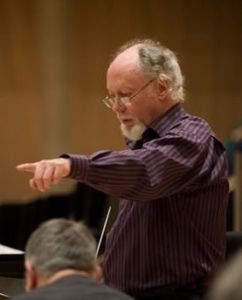
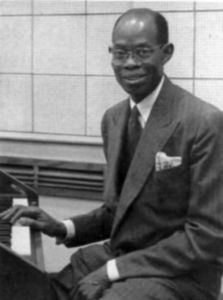
Paule Maurice, Malcolm Forsyth, Fela Sowande
Source: CBC Records CD (my rip!)
Format: mp3, 320k/s (CBR), DDD Stereo
File Size: 186 MB
Download Link – https://mega.co.nz/#!kApQEarC!KAfMtWKHMJWntoN2e-fYZ33vqKI9sGw1v9ecfQFFvD0
Enjoy! Don’t share! Buy the original! 🙂
And don’t forget your friendly uploader! 😉
Thanks.
No.434
Benedict Mason (*1954) came to composition relatively late, having studied film-making after graduating
from King’s College, Cambridge. His work embraces many aspects of post-modern diversity, including electronics,
exploration of polyrhythms and video. Of particular importance in Mason’s work are spatial considerations and
since 1993 he has written a series of works for specific venues, generically entitled ‘Music for Concert Halls’.
These works exploit the architectural and acoustical properties of the building, such as the Clarinet Concerto,
written for the Royal Albert Hall, in which only the soloist appears on stage while the members of the ensemble
are positioned around the auditorium.
David Sawer (*1961) studied music at the University of York and subsequently won a DAAD scholarship
to study in Cologne with Mauricio Kagel. In 1992 he was awarded the Fulbright-Chester-Schirmer Fellowship in
Composition. A Paul Hamlyn Foundation Award followed in 1993 and, in 1995, the Arts Foundation’s Composer
Fellowship. In 1996 he was composer-in-association with the Bournemouth Orchestras; in 2006 he was
awarded a Civitella Ranieri Fellowship. The 1990s saw a succession of important commissions. Byrnan Wood,
his first large-scale orchestral piece, was premiered at the Proms. Drama, or a fascination with theatrical possibilities,
is present in many of his works. His radio composition Swansong, a commentary in words and music on a
short story by Hector Berlioz, won a Sony Award in 1990. In Byrnan Wood, the image from Macbeth of
Malcolm’s disguised army advancing on Dunsinane provided an initial abstract idea – sound transforming itself
as it moves through the orchestra.
Music by Benedict Mason & David Sawer
Played by the BBC Symphony Orchestra
Conducted by Lothar Zagrosek & Andrew Davis
"Lighthouses of England and Wales – being a guided tour around a chorus of the main English and Welsh
lighthouse phases (as extant in the Trinity House Schedule of Lighthouses and Fog Signal Characters and
Equipment), from the Solway Firth to the Farne Islands, some of which were notated "in the field", and in
which each lighthouse is portrayed in solo, in turn, with accompanying pre-echoes and "after-images" of
the others. And also part of a topographical series of pieces featuring compositional "surveying???", whereby
physical characteristics and statistics form the basis of a piece’s musical realisation.
During the summer of 1987 I visited all the main Trinity House Lighthouses. I worked in situ and from
different vantage-points, notating the interplay of their patterns with less important or more distant
flashing signals. I worked entirely objective intentions, and was not at all concerned with Romantic notions
of seascape and moodscape (that came later at my desk, when I adopted such concerns in a more
ironic context). I tried to examine "orchestrational" notions of depicting weather, sea and natural
phenomena in terms of our conditioned responses to such musical approximations. Precise depiction
of weather was important. I worked in all conditions and travelled to other locations during daylight.
Scale was something else I tried to notate. A distant lighthouse signal is the gentlest bleep on the
horizon. Close to, is a huge lumbering beam that swings past, appearing to speed up as it comes towards
you and slow down after it has gone past. This is translated into sound as its most literal when the
conductor makes a semicircular sweeping gesture across the orchestra, which cues all the players in
domino effect as the conductor’s arm passes the line of vision.
This silent light was continuously mysterious to me, even more so given the metronomic and dynamic
way in which the lighthouses behaved. To translate light into sound on many simultaneous levels was
also am "orchestrational" endeavour. I had in my mind the possibility of the piece representing a
model of this island’s coastline, the size of a concert hall, in which all the lighthouses are flashing in
a tempo and can be viewed/heard together. It is as if one is moving on a fast journey through a series
of different locations while always remaining on the same spot. To use a photographic analogy, each
location exists in a different depth of field, each coming into focus to be viewed briefly before turning
the lens to take control and develop, by virtue of the deliberate device of each new episode
interrupting and distracting the listener’s attention, and curtailing his or her involvement with
the previous view or episode."
Benedict Mason
Sources: Collins Classical & NMC CDs (my rips!)
Format: mp3, 320k/s (CBR), DDD Stereo
File Sizes: 37 MB / 47 MB
Lighthouses of England and Wales – https://mega.co.nz/#!x40hzYhR!alD1BEroG01AniD4Z7vgRlP98GVE9NqQIk9HgE6 MUbY
Byrnan Wood – https://mega.co.nz/#!YkdBVTCK!Zah-bHTucjtDFr3iY-LJ0yTQ7iUy7knaNT1eqxUFBgQ
Enjoy! Don’t share! Buy the originals! 🙂
Carl Nielsen’s (1865-1931) Aladdin, Opus 34/FS 89, is incidental music written to accompany a
new production of Adam Oehlenschl???ger???s "dramatic fairy tale" presented at The Royal Theatre in Copenhagen in
February 1919. Nielsen composed much of the music in Skagen during the summer of 1918, completing it after
returning to Copenhagen in January 1919. He experienced major difficulties with the work as the director,
Johannes Poulsen, had used the orchestra pit for an extended stage, leaving the orchestra cramped below a
majestic staircase on the set. When Poulsen cut out large parts of the music during final rehearsals and changed
the sequence of dances, Nielsen demanded that his name be removed from the posters and the programme.
In fact, the theatre production in February 1919 was not very successful and was withdrawn after only 15 performances.
Nielsen frequently conducted extracts from Aladdin to great popular acclaim both in Denmark and abroad.
The music was successfully presented at London???s Queen’s Hall on 22 June 1923 and at 12 performances of Aladdin
at the Deutsches Schauspielhaus in Hamburg in November and December 1929. Nielsen had been scheduled to
conduct extracts with the Radio Symphony Orchestra on 1 October 1931 when he suffered a major heart attack.
Lying on a hospital bed, he was nevertheless able to listen to the "Oriental March", "Hindu Dance" and "Negro Dance"
on a crystal set before he died the following day.
The two Peer Gynt Suites by Edvard Grieg, compiled from the composer’s elaborate stage score,
need no introduction. The performance by Herbert Blomstedt and the San Francisco Symphony
is one of the finest available, and the coupling with Aladdin is only too appropriate.
Music by Carl Nielsen & Edvard Grieg
Played by the San Francisco Symphony Orchestra
Conducted by Herbert Blomstedt
"This disc is split between two Scandinavian composers, containing the two Peer Gynt Suites of
Norwegian Edvard Grieg and both the Maskarade Overture and Aladdin Suite of Denmark’s Carl Nielsen.
I’m not into multiple versions of Peer Gynt, so I can’t really compare the performance on this album to
others, but to my untrained ear Herbert Blomstedt leads the San Francisco Symphony in what are very
satisfying performances. The playing is full and polished, conveying a shimmering sense to the music
overall, and a feeling of unstoppable drive in particular as the well-known "In the Hall of the
Mountain King" reaches its conclusion. Meanwhile, my lingering attention lies more in the direction
of the Nielsen music, in particular the Aladdin Suite. Its opening Oriental Festive March is lush
and decadent, and though in my estimation the rest of the piece never quite reaches such propulsive
heights again until the very end, all the in-between is nonetheless well worth the trip. All in all, this
a marvellous disc, both for the more familiar Grieg and the lesser known but engaging music of Nielsen."
Amazon Reviewer
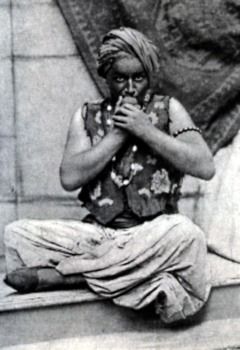
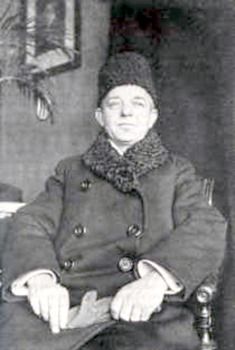
Johannes Poulsen in his production of Aladdin; composer Carl Nielsen in 1918
Source: Decca CD (my rip!)
Format: mp3, 320k/s (CBR), DDD Stereo
File Size: 145 MB
Download Link – https://mega.co.nz/#!ZQ5UVILB!DCxgYBenPIYoExP4fDVu3xvqmKBSRDBpennZi3f opqs
Enjoy! Don’t share! Buy the original! 🙂
And don’t forget your friendly uploader! 😉
It is possible, if perhaps not likely, that when British composer and conductor Albert William Ket???lbey died
in 1959 at the age of 84 he had somehow heard some of then-young Henry Mancini’s suave music. If so, perhaps
the aged Ket???lbey was able to recognize that the mid-twentieth century was getting from Mancini something quite
like what his own generation got from him many years earlier: music that aims to please not through depth of
content, academic pretension or gritty progressivism, but by virtue of lightheartedness, charm, and thoroughly fine
craftsmanship.
Ket???lbey showed remarkable musical gifts while still a young boy. There is an anecdotal tale (for once probably
true!) of how 11-year-old Ket???lbey wrote and publicly performed a full-length piano sonata and received the
blessing of Edward Elgar for his efforts. Two years after that he received a scholarship to Trinity College, and at
16 he was named the new organist at St. John’s Church in Wimbledon. Ket???lbey took to conducting musical
theater shortly before the turn of the new century, which no doubt helped redirect his compositional interests
toward light music.
Over the first couple decades of the twentieth century, Ket???lbey issued a hearty stream of pseudo-programmatic
orchestral works; pieces like The Phantom Melody (1912) and In a Chinese Temple Garden (1923) were
very popular in their day, and earned Ket???lbey enough money to eventually purchase and retire to an estate
on the Isle of Wright. He also composed a comic opera, the Wonder Workers (1900), and several "serious"
concert pieces, including a String Quartet and a Concert-Piece for piano and orchestra. Ket???lbey
used pseudonyms for some of his music.
His greatest popular success was probably In a Persian Market, a delightfully tacky depiction of the
hustle and bustle (but also the romance) of the orient, but Chal Romano and In a Monastery Garden
were also big hits in their day. It seems only fitting that John Lanchbery, himself a light music maverick and
ballet/opera conductor, did this recording. The suite from Ballet ???gyptien is another example of the fascination
that European composers had with the orient in the 19th and early 20th centuries.
Music by Albert Ket???lbey & Alexandre Luigini*
Played by the Philharmonia and Royal Philharmonic* Orchestras
With The Ambrosian Singers
Conducted by John Lanchbery & Anatole Fistoulari*
"It’s a joy to hear this collection again after a lapse of years. In Lanchbery’s hands
sentimentality is firmly played down in a forthright and yet refined approach that enables
Ketelbey’s splendid tunes to emerge with elegance and stylishness.
The obvious favourites are here, of course; but after getting the programme under way with
superb performances of In a Persian market and In a monastery garden (both complete
with chorus) Lanchbery then gives us Chal Romano, a more ambitious piece of work
that at times reminds me of Elgar (as well as of Eric Coates and Franz Lehar) rather
than the more familiar Ketabey. A real joy, too, is The clock and the Dresden figures, a
truly delicious piece of light music with a concertante piano part brilliantly played by
Leslie Pearson. Vocal solos by Vernon Midgley and Jean Temperley also help to give
further individualism to In the mystic land of Egypt and Sanctuary of the heart.
Altogether this is a most imaginatively planned and splendidly performed tribute to a
master of melody. The digital refurbishment, too, produces astonishingly vivid sound
quality. I can’t imagine anybody being disappointed with the end product. A.M.L."
Source: EMI Eminence CD (my rip!)
Format: mp3, 320k/s (CBR), ADD Stereo
File Size: 155 MB
Download Link – https://mega.co.nz/#!5RZQGSZS!XuMhswp1LMlQCX47g-PpVx3lIUM6x3AxJxyYKKHcgyI
Enjoy! Don’t share! Buy the original! 🙂
Don Kay’s musical language has its roots in the tradition of Western art music but has been
significantly shaped by his experience of Tasmania’s environment and history.The process of
transforming this experience into musical form involves what he describes as styles of thinking:
the use of pure sound in its own right; literal – imitating existing sounds; metaphorical – evocative/
suggestive; and abstract – detached from specific meaning.
Tasmania’s natural environment has been a major influence in his composition.Weather and
landscape, for example, have inspired asymmetrical patterning with short recurring motifs involving
subtle shifts and changes.Kay identifies Hastings Bay (1986) as the first mature piece which was a
direct, conscious response to a specific personal experience of a specific place, acknowledged by the
title. Two works, amongst a number important to him for reflecting this influence, are: Tasmania
Symphony – the Legend of Moinee for cello and orchestra (1988), and Piano Trio,
The Edge of Remoteness (1996).
Kay is aware that his response to nature is developing into an individualised, personal language
which, liberated from literal and metaphorical connections, now permeates his abstract work.
Don Kay was born on January 25th 1933 in Smithton, Tasmania. He was educated at Smithton
Primary School, Launceston Church Grammar School and the University of Melbourne where he
gained his music degree.He studied composition privately in London with Malcolm Williamson (1959-1964).
Since returning to Hobart in 1964 he has composed much music for professional individuals,
ensembles, young performers, amateur groups, theatre, concert and public occasions. His compositions
include two one-act operas, a three-act opera, five concertos, three symphonies, vocal, choral and
chamber music, including six string quartets. His works have been performed Australia-wide and
internationally.
Music Composed by Don Kay
Played by the Tasmanian Symphony Orchestra
With Christian Wojtowicz (cello)
Conducted by Richard Mills
"The Australian Composer Series has embraced new recordings, the very occasional import from
another label and reissues. This Don Kay release falls into the last category. It was recorded by Kay’s island
state orchestra in Hobart in 1992. And it fits very soundly into the wide-ranging brief that constitutes this series.
Kay studied first in Melbourne, and then in London (1959-64) with Malcolm Williamson. Returning home
he taught at the University of Tasmania rising to the position of Dean of the Faculty of Music – a position
from which he retired in 1998.
There are two big works here, both rooted in the soil and the sea and in the myth and history of the island.
The Tasmania Symphony – The Legend of Moinee is a five-movement work lasting forty minutes. It’s
effectively a symphony with cello though not a cello symphony. The solo instrument represents the
Aboriginal Moinee, thrown down to the land from heaven, with the orchestra taking on a variety of roles.
Thus they are involved in some terse and tense hunting motifs as well as more quietly reflective music.
The slow cello lament – perhaps representing Moinee’s capture – is reflective and keen. Some of Kay’s
writing may remind one of Vaughan Williams and Hovhaness, and especially so in the second movement,
Love Voice of the Moinee. But Kay summons up some rough-hewn colours for Creating the Land –
plenty of toil and cello sawing and the smell of churning soil. The heart of the Symphony is Land of Moinee
which has drum rolls, sinuous ostinati, bells, chattering birds – Ravel-cum-Messiaen perhaps – plenty of
solo voicings and burgeoning life force. The Postlude again evokes VW-Hovhaness modal nobility and
the final wispy ascent of the spirit is a fine touch with which to end.
There is an Island is a lighter work written in 1977. It’s a cantata for children’s choir and orchestra
to a text by the English-born but Tasmanian-settled poet Clive Sansom (1910-1981). In nine movements
it charts the story of the Tasmanian Aboriginals and the early settlers. Whether declaimed or sung
this is an eminently workable piece, excellently realised. There are quotations of national anthems (French)
and flag wavers (Rule! Britannia), roistering ballads, and folk songs such as Over The Hills and Far Away
and She Moved Thro’ The Fair. They speak of the ravages of nostalgia and separation, war, and of the
challenges of a new land, and end with hope for reconciliation and for the future. Kay uses simple –
but not simplistic – means to depict battles and the whoop of nauticalia. Touches of Grainger maybe
from time to time."
Musicweb
Source: ABC Classics CD (my rip!)
Format: mp3, 320k/s (CBR), DDD Stereo
File Size: 177 MB
Download Link – https://mega.co.nz/#!E9tmBbQb!UnND-k5nUFB2786rIc1hUlZz-s1QIN0jUo-o7yIHuXs
Enjoy! Don’t share! Buy the original! 🙂
Sorry, I just couldn’t resist it… lol.
Thanks as always, wimpel!
Du Mingxin (Chinese: 杜鸣心; pinyin: D??? M???ngxīn; born 1928) is a Chinese composer known for
his work on ballets, concertos and a symphonic Beijing Opera. His youthful studies include a spell at the
famous Yucai School in Chongqing. He moved to Shanghai in 1948, where he performed as a pianist.
He attended the Tchaikovsky Music Conservatory in Moscow from 1954-58, before joining the Beijing
Central Conservatory.
A lively overture and an epic program symphony by Chinese composer Du Mingxin, best remembered
for his contributions to the most famous Maoist propaganda ballet, The Red Detachment of Women
(posted earlier in this thread (http://forums.ffshrine.org/f92/wimpel69s-could-film-music-classical-corner-work-121898/4.html#post2194375)). The style is, broadly speaking, Socialist Realism with Chinese motives.
Straightfoward, beautifully orchestrated and entirely persuasive in its language.
Music Composed by Du Mingxin
Played by the Hong Kong Philharmonic Orchestra
Conducted by Kenneth Jean
Source: Marco Polo CD (my rip!)
Format: mp3, 320k/s (CBR), DDD Stereo
File Size: 100 MB
Download Link – https://mega.co.nz/#!YsN1UQzY!AXQvpjOD0vRpJAOfGTYvZUpPQasQshZEbbNkXF6 WRHk
Enjoy! Don’t share! Buy the original! 🙂
ps – i know hovhannes already
Most seem to agree that a lot of Goldsmith’s Star Trek was inspired by Vaughan Williams. The V’ger music in particular seems to come from Vaughan Williams’s score to Scott of the Antarctic (later turned into the Symphony No. 7)
———- Post added at 11:17 PM ———- Previous post was at 11:10 PM ———-
Hi. I’m looking for some new classical music with that old world vibe. By old world vibe I mean a similar type of sound to Grieg’s Anitra’s Dance from Peer Gynt, or Brahm’s Hungarian Dances, Liadov’s Village scene by the Inn. Any help would be greatly appreciated.
Have you heard Dvorak’s Slavonic Dances or Bartok’s Romanian Dances? Actually, Dvorak and Bartok have written a lot in the style of that old rustic European sound. Check out Dvorak’s Serenade for Strings, especially this movement Dvorak – Serenade for strings, Op. 22, II. Tempo di valse (with score) – YouTube (http://www.youtube.com/watch?v=0CXl91_eCsg)
Born in Milan, Italy, in 1954, Elisabetta Brusa started composing before she was 5
and created over 30 piano pieces and a string quintet (kept by memory through the years)
before starting Composition studies at the Conservatorio of Milan with Bruno Bettinelli,
teacher of Claudio Abbado, Riccardo Muti, Riccardo Chailly, Maurizio Pollini, and Uto Ughi.
She graduated with Azio Corghi in 1980 with a Diploma in Composition. From 1976 to 1981
she followed the composition courses at Dartington Hall, Great Britain, held by Sir Peter
Maxwell Davies, and from 1978 to 1985 she took periodic lessons from Hans Keller in London.
The composer reflects on her works:
"Firelights (1992-1993), for large orchestra, is a free fantasy inspired by various
masterpieces written throughout the centuries for festive events such as fireworks, dances,
mythological stories, chimerical and wild scenes and also phantasmagoric images and
atmospheres. The work is dedicated to the conductor Fabio Mastrangelo.
Adagio (1996), for string orchestra, is a freely structured composition in a single
movement inspired by well-known masterpieces such as those of Albinoni, Mahler (Adagietto),
Rodrigo and Barber. Independent of a pre-established form (sonata or suite), it originated
as an autonomous composition in which neo-tonal techniques are amalgamated with
contrapuntal techniques, and yet it follows a certain formal tradition and an expressive
style which have distinguished the numerous Adagios of the past.
Suite Grotesque (1986), for orchestra, consists of four free fantasy movements
connected to one another by a grotesque atmosphere full of unexpected timbral and
structural effects that create a phantasmagoric aura within a neo-tonal style. They vary
in character, however, and reflect typical movements of other established musical forms.
The first is a domineering and powerful Scherzo, the second a dark, sinister and
evanescent Adagio, the third an Andante pervaded by an insinuatingly gentle and
melodious atmosphere and the fourth is a vigorous and caricatural Finale. The first
and third movements have similar themes, as do the second and the fourth. This last
movement contains all the themes of the Suite, particularly in the final fugato, where
they are presented in quadruple counterpoint. They have the same tonal centre – E –
in common.
Favole (Fables) (1982-1983), for orchestra, is a work for young people and
the not so young, with a little philosophy, some cultural tradition and a pinch of
ironic humour, but above all a great deal of fantasy and liberty in the wake of the
literary texts that inspired them. The work was dedicated to my godson Matteo on
the occasion of his birth!"
Music Composed by Elisabetta Brusa
Played by the National Symphony Orchestra of Ukraine
Conducted by Fabio Mastrangelo
"Elisabetta Brusa studied at the Milan Conservatory graduating in 1980. Later she followed
composition courses at the Dartington Summer School of Music and at the Tanglewood Music
Centre. She also studied with Hans Keller whom she considers her "spiritual enlightener and mentor"
and to whose memory she dedicated her orchestral work Requiescat.
The earliest work here, Favole, completed in 1983, "is a work for young people, and the not so
young". It is based on several well-known fables by Aesop, Andersen, La Fontaine and Perrault. This
suite of seven short, neatly characterised movements is a good example of Brusa???s happy music
making and remarkable orchestral mastery. Colourfully scored and superbly crafted music it is in
turn serious and humorous, tender and mildly ironic, tuneful and mildly dissonant. This is the sort
of work that could and should be as popular with young (and not so young) audiences as the
celebrated Peter and the Wolf or L???Histoire de Babar.
Much of the same could be said of the Suite Grotesque of 1986, though the music is appropriately
more ironic and whimsical. Firelights and Wedding Song are somewhat lighter in mood, and the
former is again a brilliant orchestral showpiece in much the same vein as Stravinsky???s Fireworks.
Both Adagio for strings completed in 1996 and Requiescat of 1994 are altogether more serious
in intent. The beautiful Adagio is overtly a near-cousin of Barber???s ubiquitous similarly titled piece.
The writing for strings is again remarkably assured. As already mentioned, Requiescat is
dedicated to the memory of Hans Keller. This is a deeply-felt, often moving elegy (it ends with
a treble voice softly singing the words Requiescat in pace); and, no doubt, the major work here.
Elisabetta Brusa???s music, which was new to me, is fairly traditional, colourfully scored, mildly
dissonant, in a freely tonal manner. As such, it is quite accessible, often entertaining and often
quite attractive. No great masterpieces here, maybe, but honest and sincere music making that
repays repeated hearings, especially in fine performances and recording such as these."
Hubert Culot, Musicweb International
Source: Naxos CD (my rip!)
Format: mp3, 320k/s (CBR) DDD Stereo
File Size: 175 MB (incl. booklet)
Download Link – https://mega.co.nz/#!g8UnyTRB!c4z7sBs_ce7a7isHu-9A5mbu_jYejfP4-grRiMqZEIs
Enjoy! Don’t share! Buy the original! 🙂
Born in New York City on 11 December 1908, Elliott Carter began to be seriously interested in music
in high school and was encouraged at that time by Charles Ives. With the explorations of tempo relationships
and texture that characterize his music, Carter is recognized as one of the prime innovators of 20th-century
music. The challenges of works such as the Variations for Orchestra, Symphony of Three Orchestras,
and the concertos and string quartets are richly rewarding. In 1960, Carter was awarded his first Pulitzer
Prize for his visionary contributions to the string quartet tradition. Stravinsky considered the orchestral
works that soon followed, Double Concerto for harpsichord, piano and two chamber orchestras (1961)
and Piano Concerto (1967), to be "masterpieces".
Elliott Carter has been the recipient of the highest honors a composer can receive: the Gold Medal for
Music awarded by the National Institute of Arts and Letters, the National Medal of Arts, membership in
the American Academy of Arts and Letters and the American Academy of Arts and Sciences, and honorary
degrees from many universities. Hailed by Aaron Copland as "one of America’s most distinguished creative
artists in any field," Carter has received two Pulitzer Prizes and commissions from many prestigious
organizations. He died in 2012 at the ripe old age of 103.
Commissioned by George Balanchine???s Ballet Society, The Minotaur is an exploration of the
neo-classical style that marked the last traditional narrative Carter composed. It is joined on this album
by settings of two poems by Robert Frost and the Piano Sonata, together illuminating the
composer???s oft-overlooked early works; the details of these early pieces are at once complex, immediately
graspable, and immensely powerful. Says Daphne Carr:
"Let the Ives-inspired thorns of Carter – endless tumults of timbre, complex polyrhythms, spasms of
motifs – only just brush against your skin with this early work. This ballet hints at the great composer’s
future heights while giving the ears of lesser mortals (read: most everyone) a chance to catch a breath."
Music Composed by Elliott Carter
Played by the New York Chamber Symphony of the 92nd Y
With Jan DeGaetani (mezzo-soprano, Two Frost Poems)
And Gilbert Kalish (poems) & Paul Jacobs (Sonata) (pianos)
Conducted by Gerard Schwarz
"Like most innovators, Carter did not reach his mature language overnight, and alongside
his formulation of the style that would make him world famous came works like The Minotaur,
premiered in 1947. Originally intended to be choreographed by Ballanchine, it was ultimately
staged by his assistant, John Taras. The ballet had two performances and then remained
unheard in its complete form until 1988, when the present recording was preceded by two
concert performances. While Carter the dramatist has mostly been evident in the scenarios
created for the later instrumental music, he has written comparatively little for the stage.
The Minotaur is the second of his two published ballet scores. His only opera, the astonishing
What Next?, due to appear shortly from ECM, was premiered after the composer was ninety.
Listening carefully, we realize that The Minotaur contains clues of the composer he was
about to become, but the clues are really only obvious because we know where he was
heading. On its own, the music has a great deal of the neo-Classic Stravinsky, with open-
air harmonies that perhaps stamp the work as American along with a certain harmonic
daring appropriate to a composer who was, after all, a couple of generations younger
than the Russian. The performance by Gerard Schwarz remains unique in the catalog,
and captures what is unique in the language with unerring precision (in his earlier guise
of trumpeter, Schwartz was the beneficiary of important parts in Carter???s scores for the
New York Philharmonic, the Concerto for Orchestra and Symphony for Three Orchestras).
The two tiny Frost settings (of three) are witty and surprisingly rare, given their immense
charm. The performances by the late Jan DeGaetani make one regret that she did not
go on to include the third."
Fanfare
Source: Nonesuch CD (my rip!)
Format: mp3, 320k/s (CBR), DDD Stereo
File Size: 142 MB
Download Link – https://mega.co.nz/#!E0sx0BZS!VdyQsmn3u80PU1uJCrcyYk6HK9sPsfn5dqjnOzK D4E4
Enjoy! Don’t share! Buy the original! 🙂
And don’t forget your friendly uploader! 😉
This is the second disc of Humperdinck’s fairy/folk-tale-inspired music in this thread, the only
overlapping item being the suite from Sleeping Beauty.
The present reputation of the German composer Engelbert Humperdinck (1854-1921) rests largely
on his fairy-tale opera H???nsel und Gretel, based on a well known story retold by the Brothers Grimm
and first staged in Weimar in 1893. This, whatever its faults, remains in popular operatic repertoire,
with the rather less frequently heard melodrama of 1897, K???nigskinder, revised as a fairy-tale opera
for performance in New York in 1910.
Humperdinck wrote ten stage-works, as well as incidental music for plays staged principally in Berlin.
The M???rchenoper Dornr???schen (Sleeping Beauty), based on the story by Perrault, was staged first
at the City Theatre in Frankfurt on 12th November, 1902. The Tonbilder derived from it start with an
evocative Prelude. The Ballade, opened by flutes and clarinets, leads to the third of the pictures,
Wandering, as the handsome Prince seeks his way through the forest to the Castle, entangled in thorn-
bushes that have grown over a hundred years to cover it. Festive Music brings a happy ending, as the
Prince breaks the spell that has held the Princess, her parents and the court for so long.
Incidental music for a staging of Schlegel’s translation of Shakespeare’s The Merchant of Venice was
written in 1905 for the Berlin Deutsches Theater, with which Max Reinhardt was newly associated. On such a
night (In solcher Nacht) accompanies the scene between Lorenzo and his beloved Jessica, daughter of Shylock,
who have eloped to Belmont, and there look down on the idyllic scene before them. They are joined by
Portia herself and her maid Nerissa, and the extract closes with Portia’s words "The moon sleeps with
Endymion and will not be waked" (Still! Luna schl???ft jetzt beim Endymion und will nicht aufgewecket sein.)
Humperdinck wrote his Moorish Rhapsody in 1898 and it was first performed at the Leeds Festival in that
year. The Elegy at Sunset (Elegie bei Sonnenuntergang), set at Tarifa, is gently evocative, something of a
Moorish atmosphere created by the use of the cor anglais. More overt melodic reference is made to North
Africa in Tangiers, where the scene is a cheerful Moorish coffee-house, musically not entirely remote from
Germany, the jollity brought to a close by the bassoon. The Rhapsody ends with a ride in the desert, at Tetuan,
the world of Sheherazade now more overtly suggested by the turns of melody.
Die Marketenderin (The Canteen Woman) is a Spieloper, first staged at the City Theatre in Cologne
in 1914. The Prelude starts with the ominous sounds of drums, softly accompanying double basses,
followed by cellos, in a theme of tragic implication, in music that soon moves to a more cheerful mood,
ending with military optimism.
Music Composed by Engelbert Humperdinck
Played by the Slovak Radio Symphony Orchestra
Conducted by Martin Fischer-Dieskau
Source: Marco Polo CD (my rip!)
Format: mp3, 320k/s (CBR), DDD Stereo
File Size: 159 MB (incl. cover, booklet)
Download Link – https://mega.co.nz/#!hEQTAAoY!B98zejtkAbdnNjXyX9moD3qCtnMx-TZHFrz7KD2_sGc
Enjoy! Don’t share! Buy the original! 🙂
Enrique Granados (1867-1916) was born in L???rida on 27th July 1867. During his childhood
he spent some years in the Canary Islands, a period that he always fondly remembered as a lost
paradise. His leaning towards music became apparent at an early age, but he owed his main
academic training to Joan Baptista Pujol. Felipe Pedrell, one of the founding fathers of contemporary
Spanish music, took an interest in the boy when he heard him play in a competition. In 1886
Granados had to earn his living as a caf??? pianist, but in 1887 he moved to Paris, where he
undertook further study with B???riot. He met the pianist Ricardo Vi???es, with whom he gave
various duo concerts, and also fell under the conservative influences of the Schola Cantorum.
Some, like Collet, maintain that the Danzas espa???olas (Spanish Dances) date from his stay in Paris.
It has not been possible to establish absolutely the date of composition of the Danzas espa???olas
para piano. Granados himself claimed to have written them in 1883, which would make them
a work of extreme youth. The other possibility is that he edited them in Paris in 1888, or at least
that there they took on their definitive form, since the first performance was given in Barcelona in
1890 by the composer. Whatever the case, the Danzas represent the most obviously nationalist
music of Granados, a notable example of the influence of Pedrell???s principles. The popular
inspiration is, however, dressed in completely romantic musical language. Granados is not
here harmonizing folk motifs, since his themes are original, although the connection with popular
tradition may be evident. The Danzas are probably not an expression of great music, but are
written with elegance and finesse and had a great effect in their time.
In view of the popularity of the dances various musicians have attempted the partial
orchestration of the collection, among others Garc???a Fari??? and Lamote de Grignon; the
orchestration used for the present recording is by the composer, violinist and
conductor Rafael Ferrer.
Music Composed by Enrique Granados
Played by the Barcelona Symphony and Catalonia National Orchestra
Conducted by Salvador Brotons
"This overtly nationalistic music, using original tunes, has encouraged various composers to
orchestrate them, of which this set by Rafael Ferrer is colourful and effective. The flutes and oscillating
strings in No. 2 have a haunting atmosphere, and the delicacy of writing in the central sections
of No. 5, flanked with its strong, brooding theme, is imaginative also. If, in its orchestral format,
this is hardly the most subtle music, it is all colourful and enjoyable. The recording is vivid and
bright, matching the performance, and this inexpensive CD is worth its modest price."
Penguin Classical Guide
Source: Naxos CD (my rip!)
Format: mp3, 320k/s (CBR), DDD Stereo
File Size: 149 MB (incl. cover, booklet)
Download Link – https://mega.co.nz/#!Q8FngSDI!afCFCxgYayjP5RREltLJtFk7JtBed__j1TPJsLI EZgo
Enjoy! Don’t share! Buy the original! 🙂
Ernest Bloch came to America from Switzerland in 1916 and became a citizen eight years later.
As most immigrant composers do sooner or later, he conceived a musical response to his new home;
in his case it was sooner -1926 – and the feelings American history aroused in him were perhaps somewhat
undigested. America, an Epic Rhapsody is not frequently revived. Both the comparative neglect and
the occasional flickers of interest (Leopold Stokowski’s, for instance) were easy to understand when the
Waterloo Festival Orchestra played the work on its Independence Day concert under Gerard Schwarz.
The piece is in three substantial movements, headed ”1620,” ”1861-1865” and ”1926.” Bloch used the
themes of his adopted country with a persuasively American exuberance and, it might be argued, with
something of an American indiscrimination. It is a piece that veers from the touching to the embarrassing,
depending no doubt in part on the listener’s frame of mind or aesthetic stance. I love ”The Old Folks at Home,”
but I was not sure how to react Saturday to hearing it developed as a triumphal symphonic theme in full
panoply. This is not like Ives, whose borrowings from the vernacular most often carried a vernacular effect
and were couched in progressive or upsetting musical contexts rather than comforting familiarities.
Bloch’s idiom and manner here are apt to provoke the comment ”movie music,” which is not quite fair
but not misleading either. It is especially hard to hear American Indians represented by the kind of falling
minor thirds and drumbeats that Hollywood used for them without a reaction of condescension.
(And did George Bernard Shaw, I wonder, ever have the occasion to hear Bloch’s paean? ”Pop Goes the
Weasel” had been, decades earlier, Shaw’s favorite metaphor for musical simplemindedness. Bloch’s must
surely be the only serious composition to incorporate it – and without a blush or a smirk, at that.) The
saving grace is that Bloch was a consummate craftsman; the rhapsody is colorfully and expertly scored,
it moves with confidence, its original thematic ideas are coherent, and its climaxes are surely built. All of
that kept one’s interest alive, and could be enjoyed even as one gradually concluded that the work still
belongs, for now, on the shelf.
This recording includes a speech by Bloch at the end in which he explains what motivated him
to compose his paean to America.
Music Composed by Ernest Bloch
Played by The Symphony of the Air
With The American Concert Choir
Conducted by Leopold Stokowski
"Bloch’s America may not be one of his greatest pieces, but then none of his
“geographical works” (Israel, that Swiss thing) belongs in that category. Like the
country itself, America the “musical” is big, ungainly, and lots of fun. It ends with
an audience-participation sing-along, for those who are so inclined. Stokowski did
it for Vanguard, and Naxos has another very good version featuring Dalia Atlas.
Take your pick."
Classics Today
Source: Vanguard CD (my rip!)
Format: mp3, 320k/s (CBR), ADD Stereo
File Size: 120 MB
Download Link – https://mega.co.nz/#!YJY0VQxQ!Wvz_NiiiaFqkfL8Ro394EGYip8Q8GfF77vHZ-aC8oWA
Enjoy! Don’t share! Buy the original! 🙂
The Sinfonietta in B major, op.5, is the first large-scale orchestral work written
by the 20th-century Austria composer Erich Wolfgang Korngold. Korngold began
sketching the work in the spring of 1912 (about a year after his childhood mentor, Gustav
Mahler, died), just before his 15th birthday and finished the sketches in August 1912.
The orchestration of it dragged on for another year, until September 1913. The Sinfonietta
was premiered in Vienna on 30 November 1913 under the direction of Felix Weingartner
(to whom the work is dedicated, in thanks to his support of Korngold), and was a sensational
success, resulting in further performances all over Europe and America.
The 1919 Symphonic Overture "Sursum Corda" (Latin for "Raise thy hearts") is
particularly interesting for film music fans since its main thematic material was later used by
Korngold for his epochal film score The Adventures of Robin Hood (1938).
Music Composed by Erich Wolfgang Korngold
Played by the BBC Philharmonic Orchestra
Conducted by Matthias Bamert
"This 1995 Chandos release features two impressive works from the early years of Erich
Wolfgang Korngold’s career, when he was regarded as a Wunderkind rather like his
namesake, Wolfgang Amadeus Mozart. The symphonic overture, Sursum Corda, Op. 13,
written in 1919 when the composer was 22, is a fantastically adventurous work in the
mold of Richard Strauss’ tone poems; yet surprisingly, it proved to be a bit ahead of its
time and a failure with audiences. However, it ended up being used extensively in Korngold’s
1938 score for Warner Brothers’ The Adventures of Robin Hood, which won an Academy
Award. This brilliant piece is well matched on this CD by an earlier composition, the
ambitious Sinfonietta in B flat major, Op. 5, which Korngold composed between 1911
and 1912 and which demonstrates his astonishing precocity in orchestration, harmonic
modulations, and absorption of the finer points of symphonic structure. Recorded in
1994, these performances by Matthias Bamert and the BBC Philharmonic are enjoyable
for their bright colors, smooth execution, rich textures, and abundant energy."
All Music
Source: Chandos CD (my rip!)
Format: mp3, 320k/s (CBR), DDD Stereo
File Size: 150 MB (incl. cover & booklet)
Download Link – https://mega.co.nz/#!Ek1ixLzB!FQriZCYLd93WGDL5aIn4XG300YQ5BF2p-CiIE0VZI2c
Enjoy! Don’t share! Buy the original! 🙂
***
No.444
Ernest John Moeran belongs to the generation of British composers that flourished in the
first half of the twentieth century. He was born in 1894 into a family of Anglo-Irish origin
and was sent to school at Uppingham, where Joachim was an occasional visitor. His studies
at the Royal College of Music were interrupted by the war, in which he was seriously wounded,
and his health and later stability seem to have been seriously affected by his injuries, when
a piece of shrapnel lodged in his brain. He resumed his studies at the Royal College under
John Ireland after a brief period of work as a schoolmaster at Uppingham. Ireland remained
a strong influence on his composition, as was Delius and, it might be supposed, his friend
Peter Warlock. Other influences may be found in the landscape and folk-song of his native
Norfolk and in those of the country of his forebears, Ireland, where he died in 1950. His
earlier work included songs and chamber music that earned him favourable attention,
while the 1930s brought a change of direction, notably in his First Symphony, a work
suggesting the influence of Sibelius that given its first performance in January 1938, after
a prolonged period of gestation. In 1945 he married the cellist Peers Coetmore, for
whom he wrote his Cello Concerto, followed by other works for the instrument.
The three rhapsodies featured on this album, along with the tone poem In the
Mountain Country, are all deeply influenced by the English countryside.
Music Composed by Ernest John Moeran
Played by the Ulster Orchestra
With Margaret Fingerhut (piano)
Conducted by Vernon Handley
"The earliest work here is the Harty-dedicated In the Mountain Country with its mood of earnest
reflection subtly hinting at a countryman’s ecstasy. Those subtle drum-rolls recall Ireland’s
Forgotten Rite. This is the only recording of Rhapsody No. 1 (as also with the previous item).
It is the first of three Rhapsodies – the last a virtual concerto for piano and orchestra –
heard on Chandos in the hands of Margaret Fingerhut. The First Rhapsody is dedicated
to John Ireland whose Mai-Dun is recalled in a mood of catastrophe at 4.37. This is self-
evidently the work of the composer of the G Minor symphony – still best heard on Lyrita.
The Second Rhapsody has been long familiar from the Boult recording on Lyrita. Some of
us cannot get out of our heads that it belong with the Overture for a Masque simply because
it shared an LP side with that work on the Boult’s Lyrita LP. It has an expansively romantic
theme which first appears at 1:55 but also is not short of vigour. This is a unique
collection performed with apposite sensitivity."
Musicweb
Source: Chandos CD (my rip!)
Format: mp3, 320k/s (CBR), DDD Stereo
File Size: 121 MB (incl. cover, booklet)
Download Link – https://mega.co.nz/#!AkVHVQ6a!Ux8yMwt3H4OMngQ0DyRhUhmtWOVSw4xph3RfdUO 17NA
Enjoy! Don’t share! Buy the original! 🙂
Ernesto Halffter Escriche (1905???1989) was a Spanish composer and conductor. He was the brother of Rodolfo Halffter.
Halffter was part of the Grupo de los Ocho (English: Group of Eight), which formed a sub-set of the Generation of ’27.
At the age of thirteen, he started to compose music for the piano. A critic sent a copy of Halffter’s string trio Homenajes
to Manuel de Falla, beginning a long relationship that included composition lessons from Falla. His Sinfonietta is one
of his earliest and best works; its neoclassicism shows the influence of Domenico Scarlatti. Later, he became more nationalistic
with Rapsodia portuguesa for piano and orchestra, composed in 1938, during the Spanish Civil War. In 1934 he
became director and conductor of the Seville Conservatory of Music but, married to the Portuguese pianist Alice C???mara
Santos, chose to live in Lisbon during this period up to 1954. His only pupil was the Finnish composer Ann-Elise Hannikainen,
who also became his life-companion during his later life. In 1974, the Dal??? Theatre and Museum in Figueras, Spain, was
opened. Halffter was a personal friend of Salvador Dal???, and was asked to write a piece of music to celebrate the event.
The two short, programmatic Symphonic Sketches of 1922-25 are also examples of Halffter’s early, traditional work.
Music Composed by Ernesto Halffter
Played by the Radio-Sinfonie-Orchester Frankfurt
With Suh Juh-Hee (piano)
Conducted by Tang Muhai
"Ernesto Halffter (1905-1989) studied with Manuel de Falla, and absorbed a great deal from his master. Nights
in the Gardens of Portugal, which Halffter could have entitled the first of these pieces, is very similar to Falla’s work,
including the use of piano obbligato. And the opening of the Sinfonietta will sound maddeningly familiar to anyone
who knows Falla’s Harpsichord Concerto. If you don’t mind second-hand Falla, though, these are entertaining
pieces, and in the case of the Sinfonietta the neoclassical wittiness is particularly attractive. The German
performances have plenty of Spanish tang to them, and the recorded sound sparkles."
Leslie Gerber
Source: CPO CD (my rip!)
Format: mp3, 320k/s (CBR), DDD Stereo
File Size: 140 MB
Download Link – https://mega.co.nz/#!A9dVHB5J!AAYFGTCbvjImk_srvjRFozWCuBN7bnJPAou-xN6V3BU
Enjoy! Don’t share! Buy the original! 🙂
And don’t forget your friendly uploader! 😉
Ernst Krenek (1900-1991) was one of the most prolific musical figures of his time. Born
with the century in 1900, he lived until 1991 and was active as a composer for more than seven
decades. During that time he played a part in many of the century’s significant artistic movements,
from atonality to neoclassicism and from jazz-influenced writing to total serialism, with turns to
Schubertian lyricism and avant-garde electronic music at various points. In addition to his
astonishing productivity as a composer (his work list includes 242 compositions), he was also a
prolific writer and critic as well as an avid educator. Virtually the only figure of his time to have
had both superstar popular success (with his opera Jonny spielt auf) and credibility as a major
modernist, the experience of exile was particularly difficult for Krenek, who continued to be
productive until the very end of his life without ever recovering his earlier stature.
Music Composed and Conducted by Ernst Krenek
Played by the NDR Sinfonieorchester
With Gerti Herzog & Horst Goebel (pianos)
Source: EMI Classics CD (my rip!)
Format: mp3, 320k/s (CBR), ADD Mono
File Size: 205 MB (incl. complete artwork & booklet)
Download Link (re-rip!) – https://mega.co.nz/#!UMQFxISA!GkugfFvMSH7dVyVqrxkX5FudRb0H-nxz_mddeNg6EC4
Please note that some works need to be played without pause!
Enjoy! Don’t share! Buy the original! 🙂
In the 1920s, Ernst Toch (1887-1964) was considered one of the major forces in contemporary German,
and therefore European, music – second only, if at all, to Paul Hindemith. With the Nazi regime taking over,
Toch fled to the United States and worked in Hollywood for a number of years, though he was not as successful
as other expatriates in working for films (his most notable single credit is probably Peter Ibbetson of 1935).
There are but a few actual credits of his, the rest of his work for the silver screen is uncredited.
Toch continued his career as a concert composer in the US, finding success again towards the final decade and a half
of his life. He received a number of commissions, among them the Notturno, op.77 on this album, written for
The Louisville Orchestra, who play it here under Robert Whitney. Of his symphonies, it is perhaps the cogent,
tightly argued "Jephta" (actually a tone poem of sorts), aka Symphony No.5, that is most respected today.
It is also the most frequently recorded.
The Miniature Overture of 1932 is a charming, witty exercise in a Weill-esque style, while the
short suite Peter Pan is not as whimsical and slight as one would expect.
Music Composed by Ernst Toch
Played by The Louisville Orchestra
Conducted by Robert Whitney & Jorge Mester
"Toch was a Viennese whose musical gifts were to thrive in the same milieu as Klimt,
Berg, Rilke, Adorno, Schoernberg and Freud. He served – as did Wittgenstein – in the Austrian
army during the Great War. He embraced a measure dissonance but it is a loose embrace
admitting of a shifting amicable congress between melody and dissonance. He fled his homeland
in 1933 and via a two year stay in London ended up in America. He wrote for Hollywood but had
no big breakthroughs and the serious commissions were sparse.
The Miniature Overture is one of those work of the 1930s that has a foot planted firmly in the
1920s. It is scored sparsely and scathingly for wind ensemble. This is caustic music with a vitriolic
edge, cheery but sardonic – the equivalent of Grosz’s drawings of Berlin nightlife although written
in Hollywood.
For the composer of the Pinocchio overture it is no surprise to encounter his tripartite Peter Pan.
However the Barrie character has been tacked on as an afterthought. Pan was not in Toch’s
mind when he wrote the piece on a Koussevitsky commission at the MacDowell Colony. Now we
are back to the orchestral milieu. There is a laughing even guffawing and hiccuping allegro giocoso.
Then comes a fragmented and wispy Molto tranquillo. To conclude comes a chromium and
quicksilver, flighty and restless Allegro vivo with pawky brass commentary for contrast. Toch’s
caustic and edgy style carries over from the Miniature Overture. Do not expect dreamy impressionism.
The Notturno was also written at the MacDowell Colony. Its mood is linked with the Molto tranquillo
of the Peter Pan Fairy Tale. Evanescence and the night are suggested. There is less here of the
acidic and more of that elusive and evasive mood between nostalgia and mystery. The orchestration
is jewelled and carefully weighted. The long tense lyrical violin lines reminded me of William Alwyn
(Lyra Angelica, Symphonies 1, 4 and 5) and of the grander Hindemith (Nobilissima Visione,
Sinfonia Serena, Harmonie der Welt and Mathis der Maler).
The Symphony No. 5 is also known as Jephta – Rhapsodic Poem. The recording was made in
stereo in 1965 two years after it had been written and the year after Toch’s death. It is the most
recent recording here. This is a single movement symphony in Toch’s serious vein – an extension
and supercharging of the atmosphere in Notturno with a more marked dramatic activity. Even so
the chamber textures and solos which are so much part of Toch’s orchestral apparatus are fully
present. The feminine chamber treatment contrasts with the vitriolic-dip of the trumpet and a
chuckling figure – something of a Toch DNA strand – related to the allegro giocoso of the Peter
Pan piece but which somehow does not suggest laughter."
Musicweb
Source: Louisville First Edition CD (my rip!)
Format: mp3, 320k/s (CBR), ADD Stereo
File Size: 105 MB
Download Link – https://mega.co.nz/#!wllRBAKQ!C4tOtAr-7Kp8hHwqQnagrXZB2kpnshwjAUGlOGJ3hQ4
Enjoy! Don’t share! Buy the original! 🙂
***
No.448
Sir Eugene Goossens (1893-1962) was one of the most prominent of the younger British composers who
emerged in the years following World War I. At first regarded as part of modern music, his works are now firmly set
in the romantic tradition which audiences today find attractive and which accounts for the increasing number of recordings.
Like Mahler, Bernstein and Boulez, Goossens was known throughout his life as both conductor and composer. He
was a member of a distinguished musical dynasty and his siblings included his brother Leon, the oboist, and Marie
and Sidonie, both harpists. Both his father and grandfather, Eugene I and Eugene II, were conductors.
In 1906 Goossens returned to England, attending the Liverpool College of Music where he gained a scholarship
to the Royal College of Music in London, studying violin, piano, theory and composition ??? the latter with Sir Charles
Stanford. Goossens began his career as a violinist in Sir Henry Wood???s Queen???s Hall Orchestra. In 1916 he became
associated with Sir Thomas Beecham and the opera seasons he promoted and Goossens quickly gained the reputation
of being able to master difficult scores with remarkable rapidity.
Goossens conducted for Diaghilev???s famous Ballets Russes and for Covent Garden and in 1921 presented a landmark
series of concerts of new music with his own orchestra, including the first London concert performance of
Stravinsky???s The Rite of Spring. In 1923 Goossens was invited to America to become conductor of the newly
formed Rochester Symphony Orchestra and in 1931 he became Music Director of the Cincinnati Symphony Orchestra.
From 1947 to 1956 he worked in Australia as Resident Conductor of the Sydney Symphony Orchestra and Director of
the New South Wales Conservatorium. In 1951 he published his autobiography, Overtures and Beginners and in
1993 Carol Rosen???s study, The Goossens: a Musical Century, deals substantially with him and his work. Goossens
was knighted in 1955 and his last years were spent in London.
This post only includes the 3rd CD of this Goossens box, covering The Eternal Rhythm, Variations on a
Chinese Theme ad the programmatic suite Kaleidoscope.
Music Composed by Eugene Goossens
Played by the Melbourne Symphony Orchestra
Conducted by Vernon Handley
"Divertimento???s Dance Prelude (first of three movements) is initially light-hearted but becomes quite
serious and emphatic. Towards the end we have a major romantic climax. The Scherzo and Folk tune
central movement betrays the influence of Arthur Bliss and drifts into Szymanowski territory at moments.
The following Folk Tune is one of Goossens??? most uncomplicated pastoral sketches. It is a gem of a piece and
is eloquently treated here. The final Ballet Flamenco has some hard-faced castanets, woodblocks and side
drum. The piece was inspired by the dancing of flamenco dancer, Carmen Amaya. Goossens conducted
the orchestra when she danced de Falla???s Ritual Fire Dance in Cincinnati in 1944. This can be added to
the pictorial literature of Hispanic evocations which stretch from El Salon Mexico to Rhapsodie Espagnole.
Vernon Handley???s performance and the wonderful recording accorded by ABC???s engineers completely
outpace the Gaspare Chiarelli-conducted version once available on a Unicorn LP (RHS348).
The Variations on a Chinese Theme wind us back nearly fifty years. An innocent little theme of Chinese
dip and lilt is put through its paces. The fifth, seventh and eighth variations hark back to Brahms while
the sixth is much more modern in approach. The ninth is Dvoř???kian; the tenth like Tchaikovsky. The
eleventh could easily have been a Vaughan Williams frolic out of The Wasps. The 12th is an uncomplicated
serenade. The next variation is closer to the uncertain world and implicit threat of the music of Frank
Bridge. This later vaporises and the music drifts into an impressionistic grand valse. The last variation
begins in the mildly scary world of Tchaikovsky???s Nutcracker but soon resolves into a proto-Arnoldian
English dance.
The Eternal Rhythm is from a year later but already Goossens is showing more individuality and there
are far more hallmarks of his developed style. Goossens conducted the premiere at the Queen???s Hall
on 19 October 1920. Sinuous clarinet melodies wind in and out through an orchestral mist worthy of
the opening of Herrmann???s music for Citizen Kane. At 5.30 a Scriabinesque trumpet cries out to the
heavens as, in 1939, he was to do with the whole of the expanded trumpet choir in the finale of his
First Symphony. At 10.04 the twist in the notes is remarkable and intriguingly unsettling: French
impressionism meets Russian mysticism; Jan???ček meets Debussy. Bax must have learnt from this
voluptuous music as well. It is all well handled here although the awed trumpets faltered once or
twice. At 17.50 there is a further misty passage which seems to predict the darker moments in
Bax???s Second Symphony.
The final ten minute Kaleidoscope is an orchestral jeu d???esprit which may well be known to many
in its solo piano version. It is a varied collection seemingly out of a child???s colouring book and
music box; akin to Ma M???re L???Oye but with Stravinskian interpolations. Appropriately it opens
with Good Morning and closes with ??? you???ve guessed it ??? Goodnight. The moon floats high in a
Disneyesque night sky."
Musicweb
Source: ABC Classics (CD 3 only(!), my rip!)
Forat: mp3, 320k/s (CBR), DDD Stereo
File Size: 175 MB
Download Link – https://mega.co.nz/#!d1cgESRZ!aGfeUkgowS8e5IHAe52RPWTfiK4xdPXKP7c1U13 9sc8
Enjoy! Don’t share! Buy the original(s)! 🙂
As mentioned before, requests for specific composers or works are always welcome, as long as they’re
made in a polite manner (instead of someone just throwing me a title, as has occurred before – which,
actualy, made me think of stopping making posts altogether). You can do this i the thread, or better
yet, via personal message.
Born in B???tasz???k, Hungary, in 1894, Eugene Z???dor demonstrated an early affinity for music
(exhibiting great keyboard virtuosity) and at the age of sixteen went to study with Richard Heuberger
in Vienna. A year later he moved to Leipzig, where he was a pupil of Max Reger. After completing his
doctoral degree at the University of M???nster, he returned to Vienna, where he taught at the New Vienna
Conservatory through the 1920s. While there, he composed (among other works) a symphony and two
operas (both produced by the Budapest Royal Opera). He left the conservatory in 1928 to devote himself
full-time to composition and never ceased writing music until his death in 1977. In Hollywood, Z???dor
worked as orchestrator for his compatriot Mikl???s R???zsa, a fact never prominently mentioned by the successful
younger composer. He died in 1977.
Z???dor described his style as ???exactly between La Traviata and Lulu???. Although some of his works are
overtly ???Hungarian??? in style, for the most part he composed in a cosmopolitan but conservative twentieth-
century idiom, firmly grounded in tradition, that is strongly tonal and highly contrapuntal. This album
features the richly varied Oboe Concerto and Divertimento for Strings (his most-performed
piece) and the composer???s own favourite, Studies for Orchestra, which, despite its great profusion
of ideas and melodic lines, has a remarkable unity and consistency.
Music Composed by Eugene Z???dor
Played by the Budapest Symphony Orchestra MAV
With L???szlo Hadady (oboe)
Conducted by Mariusz Smolij
"These works have a 20th century flair of richness and formality, yet they teeter with melodic and
atonal edging. The music is eclectic: solo flute???s introductory bars of the ???Elegie??? brings to mind
Frederick Delius along with occasional tinctures of Debussy, Puccini and Zemlinsky as the composition
progresses, but this is contrasted with more enlightening qualities in the conclusive ???Dance.??? The
Divertimento for Strings, probably the most-performed of all pieces within Z???dor???s fecund catalogue,
has foundations of the Hungarian man???s past: Bart???kian impressions run strongly through each of
the three movements.
Z???dor???s Studies for Orchestra is comprised of eight separate musical dialogues. The sections are so
varied that it almost translates into a modernistic Mussorgsky Pictures at an Exhibition. Portions are
frequently acrid, but at the same time, they demonstrate Eugene Z???dor???s fascinating exercise into
what the human mind can create using a potpourri of instruments and unexpected techniques.
The coloring is a patchwork of experimentation. One example: whimsical jazz winds its way into
the sixth movement (???Song: Allegretto???) that moves into a weighted dirge-like ???Crescendo-
Decrescendo: Moderato.??? Saved for last, this Studies for Orchestra is highly complex, sophisticated
and not for the faint at heart???clever and uneasy."
Source: Naxos CD (my rip!)
Format: mp3, 320k/s (CBR), DDD Stereo
File Size: 164 MB (incl. cover & booklet)
Download Link – https://mega.co.nz/#!51dk0IAC!MCa0VEOsSvItfbX4pCUZEQrruqoRrd7aH2zVgem VkqM
Enjoy! Don’t share! Buy the original! 🙂
No.450
Ferdinand Rudolph von Grof??? (1892-1972) was born into a musical family. His maternal
grandfather, Bernard Bierlich, was first-desk cellist with the Metropolitan Opera Orchestra.
His mother was also a cellist, his father a singing actor, and when grandfather Bierlich moved
to Los Angeles, he became first cellist of the Los Angeles Philharmonic, where Grof???’s uncle
Julius was already concertmaster. Young Ferdinand was taken to Los Angeles shortly after
he was born. He made quick progress in learning to read music and play piano.
Grof??? was an indifferent student, always spending time learning new band instruments.
He ran away from home after his stepfather refused to let him quit school and worked at unskilled
jobs, writing popular songs at night. These brought him to the attention of The Elks
(an American benevolent association), who commissioned him to write a special song for their
1909 convention; the song gained some popularity. Soon Grof??? joined his grandfather and
uncle in the Philharmonic, as a violist. In his spare time he played in dance halls, sometimes
billing himself as "Professor Grof???." He founded his own jazz band in San Francisco and
wrote arrangements for it.
In 1919 bandleader Paul Whiteman heard one of these arrangements. Grof??? accepted a job
as pianist and arranger, and immediately started taking orchestration lessons from Pietro
Floridia. His very first arrangement for Whiteman was a success: "Whispering" became a
million-selling hit. When the Whiteman band relocated to New York, Grof??? went with them.
His orchestral ideas laid the foundation for what became the big-band sound. In 1923 Whiteman
conceived a concert to be given at Aeolian Hall in New York. "An Experiment in Modern Music"
presented a number of jazz-style classically composed pieces played by the Whiteman Band,
many scored by Grof???. Among them was George Gershwin’s Rhapsody in Blue, in Grof???’s
orchestration. The event made Grof??? nearly as famous as Gershwin, and Grof???’s symphonic
version of the work has become the one best known to audiences.
Grof??? began to widen his ambitions as a composer. He wrote the Mississippi Suite and, a
few years later, the Grand Canyon Suite for the Whiteman orchestra, later enlarging them for
symphony. In 1931 he resigned from the Whiteman organization and became conductor of the Capitol
Theater orchestra in New York, hosted a network radio program, and was appointed to teach
orchestration at the Juilliard School in 1939. During World War II he tirelessly conducted service
bands and USO shows.
After the war he continued to write generally light music with a jazzy American flavor. A piano
concerto was his most ambitious composition in a pure classical idiom. He also tried to follow
up on the Mississippi and Grand Canyon suites with innumerable musical portraits
of the American scene, including the three featured on this album: Hollywood Suite,
Hudson River Suite & Death Valley Suite.
Music Composed by Ferde Grof???
Played by the Bournemouth Symphony Orchestra
Conducted by William Stromberg
"Richard Strauss once famously remarked: “I may not be a first rate composer, but I am a
very good second rate composer.” The same might be said of Ferde Grof???. He’s not going to
win any medals for formal ingenuity, expressive depth, or contrapuntal mastery, but he knew
how to orchestrate, he could turn out a good tune, and, like Gershwin’s, his particular take
on symphonic jazz remains irresistibly attractive. What once may have sounded cheap and
glitzy now has period charm, and we can only hope that this second Naxos disc devoted to
his symphonic suites won’t be the last.
There’s some great stuff here. The opening Hollywood Suite contains a dazzling movement
called “Carpenters and Electricians” and a delightfully toe-tapping “Production Number”.
The Hudson River Suite offers evocative nature sounds and some authentic dog barks in
“Rip Van Winkle”, and concludes with a calamitous, Ivesian tribute to New York City.
The Death Valley Suite features a vivid portrait of a wagon train, and like the more famous
Grand Canyon Suite ends with violent weather (in this case a sandstorm). William
Stromberg leads the Bournemouth Symphony in totally enjoyable performances, vividly
recorded, with some particularly brilliant work from the brass section. If you like the
Grand Canyon Suite, you’ll be pleased to know that there’s a lot more where that
came from, and it’s no less worthy of your attention."
Classics Today
Source: Naxos CD (my rip!)
Format: mp3, 320k/s (CBR), DDD Stereo
File Size: 135 MB (incl. cover, booklet)
Download Link – https://mega.co.nz/#!g8UwAAKB!GC2GER80SZ0XVrLripxPwVL8Y7xOovxTO76Hj88 2KeI
Enjoy! Don’t share! Buy the original! 🙂
***
No.451
This is the second album of music by Florencio Asenjo in this thread, the first featured
A Thousand and One Nights and Three Images of Don Quijote (http://forums.ffshrine.org/f92/wimpel69s-could-film-music-classical-corner-work-121898/11.html#post2220756), respectively.
The Batrachomyomachia or “The Battle of the Frogs and the Mice,” is an anonymous ancient Greek
parody of the Iliad. The Trojans are represented by the frogs, the Greeks by the mice, with the crabs being
allied to the frogs winning the battle for the latter. The music is meant to illustrate the story in the spirit of
Paul Dukas’ The Sorcerer’s Apprentice and Albert Roussel’s The Spider’s Feast.
The Palm-of-the-Hand Tales consists of incidental music to ten of Yasunari Kawabata’s narratives from
his Palm-of-the-Hand Stories. These stories are very brief indeed, and they have a surrealistic, intense content,
each to be taken as complete by itself. Kawabata writes like a painter and these stories show it.
Boccaccio’s Decameron and Margaret of Navarre’s Heptameron show the influence of what was known
of The Thousand and One Nights at the time. Following these two works, Giambattista Basile wrote his
Pentameron using folktales and becoming the source of very famous stories used later by Perrault and
the Grimm brothers. The tales selected here to frame incidental musical episodes into Basile’s Pentameron
are: 1. The Cat Cinderella; 2. The Old Woman Discovered; 3. The Large Louse, the Mouse, and the Cricket;
4. Pride Punished; 5. End of the Tale of Tales.
Music Composed by Florencio Asenjo
Played by the Slovak National Symphony Orchestra
Conducted by Kirk Trevor
"Genuinely novel in an age where it’s been said that all the great themes have been used up and turned
into theme parks, the three pieces by Argentine-American composer Florencio Asenjo recorded here are
generally similar in style. They’re tonal, or at least not particularly dissonant, and they’re written for
conventional orchestral instruments. Each is based on a work of literature, which it follows closely, in the
time-honored manner of program music. So what’s the novelty? Asenjo’s music follows a unique principle
that he names maximalism, although what he means by the word is very different from the way serial
composers have used it as a pejorative contrast to "minimalism." Asenjo’s maximalism entails, as far as
possible, an avoidance of repetition, but that doesn’t mean his works have a pastiche-like effect. Instead
he derives each new theme or passage of music from the preceding one, much as the second theme of a
Classical sonata forms a contrast with the first but also follows naturally from it. The themes are often
linked by a short motive or some other common element, and each work or section might be described
as a chain of musical statements successively linked to one another but never repeating or circling back
to a starting point. The tonality is almost irrelevant. The conception is original, and this album may
present Asenjo’s work in the best light of the various recordings of his music that have appeared: the
literary program interacts with his style in a very intriguing way. Each of these pieces — based on an
ancient Greek satirical poem called the "Batrachomyomachia," a set of short stories by Japanese
writer Yasunari Kawabata, and tales from the Pentameron of Italian Renaissance writer Giambattista
Basile — has its own quite detailed character to which Asenjo’s fixed procedure is tailored. The result is
music with an uncanny narrative sense that’s not quite like anything else out there, sympathetically
interpreted by the Slovak National Symphony Orchestra under Kirk Trevor. Strongly recommended."
All Music
Source: Albany Records CD (my rip!)
Format: mp3, 320k/s (CBR), DDD Stereo
File Size: 139 MB (incl. booklet)
Download Link – https://mega.co.nz/#!J51w3Zxb!Jflg0ACCuj0RNIB850NGWwpciBwcrkwodFAcuZo IHzo
Enjoy! Don’t share! Buy the original!
No.452
About The Mystic Trumpeter of 1904, Frederick Converse related that he recast
Whitman’s Leaves of Grass into five contrasting sections, omitting the fourth stanza. As a tone
poem the music follows the new literary scheme in a sequence of five musical events without
pause The following has been excerpted from the poem:
1) Mystery and Peace (Moderato molto e tranquillo): Hark, some wild trumpeter; some strange
musician, hovering unseen in ail; vibrates capricious tunes to-night I hear thee trumpeter,
listening alert I catch thy notes, now pouring, whirling like a tempest round me???.thou freest,
launchest me, floating and basking upon heaven’s lake.
2) Love (Poco pi??? moto, arnoroso): Blow again trumpeter! And for thy theme, take now the
enclosing theme of all, the solvent and the setting – Love, that is pulse of all, the sustenance
and the pang, the heart of man and woman all for love, no other theme but love – knitting,
enclosing, all-diffusing love.
3) War and Struggle (Allegro con molto fuoco): Blow again trumpeter – conjure war’s alarums
Swift to thy spell a shuddering hum like distant thunder rolls – Lo, where the arm ‘d men hasten
-Lo, mid the clouds of dust the glint of bayonets, I see the grime-faced cannoneers, I mark the
rosy flash amid the smoke, I hear the cracking of the guns;
4) Humiliation (Adagio lamentoso): O trumpeter, methinks I am myself the instrument thou
playest, thou melt’st my heart, my brain – thou movest, drawest, changest them at will;
And now thy sullen notes send darkness through me…I feel the measureless shame and
humiliation of my race???Utter defeat upon me weighs???Yet ‘mid the ruins Pride colossal stands
unshaken… resolution to the last.
5) Joy (Poco largamente, Grazioso, Allegro molto): Now trumpeter for thy close, vouchsafe
a higher strain than any yet, sing to my soul, renew its languishing faith and hope,
rouse up my slow belief, give me some vision of the future, give me for once its
prophecy and joy…O glad, exulting, culminating song!??? Joy! joy! all over joy!
Flivver Ten Million was inspired in part by the success of another graphic in sound,
Pacific 231, by Arthur Honegger, who in 1924 used orchestral sound to ‘paint’ an
image of a great steam locomotive. Converse followed in 1927 with a score titled in
full. Flivver Ten Million: A Joyous Epic Inspired by the Familiar Legend "The Ten
Millionth Ford is Now Serving Its Owner." The term ‘flivver’ is old American slang that
was appropriated by the Ford Motor Company as a nickname for its inexpensive,
production-line automobiles. About the piece Converse noted. "I set about it for my
own amusement. I wondered what Mark Twain would have done with such a theme
if he had been a musician. He who wishes to express American life or experience
must include the saving grace of humor.
Quite early in his career, Converse wrote two work, based on the exquisite poem
Endymion by John Keats (1795-1821). Both were set in the lyrical form of the
orchestral romance, the first completed in 1900 and titled Festival of Pan, Op.9.
This was followed in the spring of 1901 with Endymion’s Narrative, Op.10.
About the latter Converse wrote that the idea for the piece derived from a scene
in Keats’ poem at the point where Endymion is withdrawn from the festival by his
anxious sister Peona, who leads him to a secluded place. There she divines the
source of her brother’s sorrow and soothes him with sisterly affection. Converse
describes Endymion’s despondency as "The struggle of a mind possessed by an idea
beyond the common view, and yet bound by affection and devotion to conditions
which confine and stifle its surging, internal impulses – one of the most painful
spiritual struggles to which a man is subject, whether it be found in the life of an
artist, a patriot or a martyr".
Music Composed by Frederick Converse
Played by the Buffalo Philharmonic Orchestra
Conducted by JoAnn Falletta
"Here???s a trivia question for you: What musical work begins with an evocation of sunrise over
Detroit? Answer: Frederick Shepherd Converse???s Flivver Ten Million, a humorous answer to
Honegger???s Pacific 231 as portrayed through the adventures of a Ford automobile. After
the dawn sequence, the factory gets to work and out comes our hero, the ten millionth
Ford, and he sets out on his journeys. There???s a sexy love scene (making out with a
Chevy?) and a wild joy ride that culminates in a collision, and after a moment of
introspection (and, we suspect, some time in the repair shop) Flivver takes off again,
good as new. Along the way, Converse calls on a host of special effects: taxi horns,
anvils, wind machine, ratchets. It???s all over in 12 riotous minutes and JoAnn Falletta
leads a clearly energized Buffalo Philharmonic in a knockout performance that alone
is worth the price of the disc.
This isn???t the time or place to go into the question of how ???great??? a composer Converse
was, but there???s no question that he had tremendous talent and a great gift for
orchestral narrative. The Mystic Trumpeter (of Whitman fame) takes a few minutes
to get going, but once it does, watch out! The battle music gives Tchaikovsky???s
Romeo and Juliet a good run for its money. And speaking of Tchaikovsky, check out
the last few minutes of Endymion???s Narrative, where Converse screws up the tension
of his lyrical, principal theme in a manner that the great Russian would have been
proud to call his own. Okay, so this may not be the most original or thought-provoking
music in the world, but who in his right mind would sneer at a few more Tchaikovsky-
style tone poems that are just about as good as the originals? And make no mistake;
Converse???s musical style did evolve over time. Flivver Ten Million, composed in 1927,
shows significant advances in harmony, rhythm, and orchestration (albeit in a
humorous vein) when compared to the other two works, both of which date from
the first decade of the 20th century.
Throughout these works, Converse demonstrates an impressive command of the
long melodic line, a keen dramatic sense, and a sure feeling for form. Better still,
Falletta and the orchestra play marvelously, holding absolutely nothing back and
taking those very fully scored climaxes from one peak of excitement to the next.
And yet there???s sensitivity aplenty, whether in the delicate harp-accompanied
interludes in Endymion???s Narrative or the gentle trumpet fanfares that open
The Mystic Trumpeter. I can hardly imagine these pieces better played or
conducted, and Naxos has contrived to produce a bold, vivid recording with
terrific top-to-bottom transparency of texture and an aptly vast dynamic range.
Certainly, this stands among the finest entries in Naxos??? American music series
to date, and markedly improves on the only available competition: the Louisville
Orchestra???s decent but less-than-spectacular versions of Endymion and Flivver.
Let???s hope Naxos pauses for a moment before moving on, to further mine this
particularly fruitful lode. Remember, Converse also wrote five symphonies???"
Classics Today
Source: Naxos CD (my rip!)
Format: mp3, 320k/s (CBR), DDD Stereo
File Size: 126 MB (incl. cover & booklet)
Download Link – https://mega.co.nz/#!J4MhlbZB!fdxsSV44du12METywi6kMibN1PNFfuqmHbToL5P TrQQ
Enjoy! Don’t share! Buy the original! 🙂
It’s ok now, but please be aware that in the Brazilian Sinfonietta, one track segues into another on two occasions, so the tracks must be played without pause in order to avoid breaks.
As a perk, the new upload includes the complete artwork & booklet, it is now 205 MB. You can fin it in the original post, or here:
https://mega.co.nz/#!UMQFxISA!GkugfFvMSH7dVyVqrxkX5FudRb0H-nxz_mddeNg6EC4
Thanks as always Wimp!
No.453
Frank Bridge’s (1879-1941) Dance Rhapsody and Dance Poem are separated by
only five years. The Rhapsody is given a grand gait with phrases and treatments recalling his
own Summer, Elgar’s Cockaigne, Julius Harison in his Troubadour Suite, Tchaikovsky
and even the pomp and circumstance Bliss of the 1930s. The gong that ends the first segment of the
Rhapsody – a sumptuous grandly confident piece – is stunningly recorded. The Dance Poem
is more subtle, more airily scored and leaning towards There is a Willow rather than the frank romanticism
of Summer. It is in six sections although here tracked as one – The Dancer, Allurement; Abandon, Tenderness,
Problem and Disillusionment. It is evidence that the Great War may have accelerated and intensified a trend
away from grand romanticism rather than being the fons et origo of Bridge???s dissonance.
The Two Poems are from the depths of the Great War. While both pieces carry pastoral-spiritual
superscriptions from Richard Jefferies one can sense the dark tinge in the horizon’s clouds. This is not an
uncomplicated untroubled ecstatic mirage although there are some gloriously ecstatic moments which hark
back to Summer. One thinks of warm evocations of the countryside such as Suk’s Summer and
Schoeck’s Sommernacht in the case of The Open Air but an elfin irrepressible energy bristles in
the unstoppable scherzo that is The Story of My Heart ??? once recorded by the composer. This might
almost be a harbinger of the great upward swing of Enter Spring. It is a delightful piece complete with
its echoes of Chabrier (Espa???a), Ravel and de Falla (El Amor Brujo). Not to be missed.
The Overture "Rebus" dates from the year before Bridge’s death when another war was already
playing out. It’s his last completed work and is meant to describe how rumour spreads.
Bridge was working on a Symphony for Strings on the day of his death. All that survives is a meaty
single Allegro Moderato. The final page of full score was incomplete and the movement was brought
to fruition by Anthony Pople. It’s fairly gaunt but not as forbidding as the Fourth Quartet. Like Rebus
the music is full of intrigue but is fascinatingly reminiscent of Hindemith and Rawsthorne.
Music Composed by Frank Bridge
Played by the London Philharmonic Orchestra
Conducted by Nicholas Braithwaite
"This disc has five pieces by English composer Frank Bridge — three of them early, two of them late,
three of them late Romantic — early Impressionist, two of them mordant Modernist and proudly Internationalist,
none of them popular and all of them rarely recorded, except, of course, by English labels. That last bit
doesn’t matter in the least. This is unquestionably great music: brilliantly conceived, strongly executed,
and powerfully individualistic. Performed with polish, passion, and deep dedication by Nicholas Braithwaite
and the London Philharmonic Orchestra, the early works here — the Dance Rhapsody from 1908, the
Dance Poem from 1913, and the Two Poems ("The Open Air" and "The Story of my Heart") from 1960 —
are lush but lucid, warm but cool, and evocative but edgy, while the two late works — the Overture
"Rebus" from 1940 and the Allegro Moderato for string orchestra from 1941, the year of Bridge’s death —
are lucid but austere, cool but hot, and edgy but lyrical. Superbly recorded in clear, bright, direct, and
honest sound by Lyrita in 1979, this disc belongs in every collection of the English modernists —
Vaughan Williams, Holst, Walton, Tippett, and, of course, Britten, Bridge’s most famous pupil."
All Music
Source: Lyrita CD (my rip!)
Format: mp3, 320k/s (CBR), ADD Stereo
File Size: 162 MB
Download Link – https://mega.co.nz/#!xFwgAICa!SeqErmBFy6p13e1cVHIHnxoyPFkRk7bCMe3tqha ltAo
Enjoy! Don’t share! Buy the original! 🙂
Trained as a violinist and as a composer at the Vienna Conservatory, Franz Schreker (1878-1934)
belongs to that group of composers whose careers were eclipsed by the events of 1933 in Germany. Schreker
enjoyed very considerable success as a composer of opera, in a style that couples the late Romantic
with an element of musical collage, presenting scenes where different layers of music are juxtaposed
or superimposed, all with a mastery of orchestral colour. Schreker won early success with Der Geburtstag der
Infantin (???The Birthday of the Infanta??? – available above in this thread (http://forums.ffshrine.org/f92/wimpel69s-could-film-music-classical-corner-work-121898/5.html#post2198585)!), a ballet based on the story
by Oscar Wilde. Der ferne Klang (???The Distant Sound???), an opera staged first at Frankfurt in 1912,
has more of Debussy than Wagner about it, dealing with the mystical pursuit by the artist for the distant
sound that he has heard. Der ferne Klang influenced Alban Berg, who made a vocal score of the
work. Of other operas, Die Gezeichneten (???The Stigmatized???) and Der Schatzgr???ber
(???The Treasure-Hunter???) are particularly effective, if more conventional than Der ferne Klang.
An expanded concert version of the overture to Die Gezeichneten (Prelude to a Drama) is featured
on this album.
Schreker wrote a relatively small amount of purely orchestral music, of which the Chamber Symphony for
23 Solo Instruments is the most ambitious – its sparse textures contrasting effectively with the overripe
hyper-romanticism of his operas.
Music Composed by Franz Schreker
Played by the Radio-Symphonieorchester Berlin
Conducted by Michael Gielen & Karl Anton Rickenbacher
"The Prelude to a Drama, which was first performed on 8 February 1914 by the
Vienna Philharmonic Orchestra under Felix Weingartner, was written in the autumn of
1913, ahead of the completion of the opera itself. It is in ternary form, the outer sections
of which make use of music from the studio scene and from the Act III pantomime which
accompanies Carlotta???s abduction. The central section (omitted in the version used
as the prelude to the opera itself ) consists of the Act III interlude. The enormous
orchestra is used with the utmost virtuosity."
Source: Koch Schwann CD (my rip!)
Format: mp3, 320k/s (CBR), DDD Stereo
File Size: 134 MB
Download Link – https://mega.co.nz/#!tocyFSbD!LBAVCxdAV_3pJYHd2MxN5l-vUUEuKyHjvm9sJ7PGIjc
Enjoy! Don’t share! Buy the original! 🙂
And don’t forget your friendly uploader! 😉
Film composer Franz Waxman (1906-1967), in addition to creating such timeless movie scores as Rebecca
and The Bride of Frankenstein, was also a superb composer of original concert music, particularly in
the final two decades of his career. Waxman’s 1959 oratorio Joshua, here recorded for the first time
on Deutsche Grammophon, is based on a libretto written by British playwright James Forsyth, whose
mixture of verse of narration has its own special, euphonious qualities. The story, as elucidated from the
Bible by Forsyth, moves forward very well and is over before you know it.
Joshua isn’t what you would think it to be, based on what you might be familiar with in terms of
twentieth century treatments of Old Testament subjects by Jewish composers. In such milieu, one
immediately thinks of Arnold Schoenberg and the antiseptic tonal language of his opera Moses and Aron.
While there is a tiny bit of that influence here, there isn’t much of it. One might also think of Kurt Weill with
his pithy, insouciant cabaret style all blown out of proportion and straining at the seams, as it is in Weill’s opera
The Eternal Road. Again, there’s a tiny bit of that stringency found in Joshua, too, but not much.
A standard movie score analogy, too, is out of place here — Joshua is not a movie score grafted to a libretto
and sung live, nor is it an opera. Joshua is an oratorio, and a very effective one. Joshua is less like a movie
score and more like a movie for your ears; it probably works as well for that purpose in the concert hall
as it does on this recording. Once you start listening to Joshua, you will want to hear the whole thing,
so the main challenge is finding the time to hear it all in one sitting.
Music Composed by Franz Waxman
Played by the Prague Philharmonia
With Maximilian Schell (narrator), Rod Gilfry (baritone) & Ann Hallenberg (mezzo-soprano)
And with the Prague Philharmonic Choir
Conducted by James Sedares
"This is a most compelling work, with some beautifully written vocal writing – both for the soloists and
the choir – and brilliant orchestral contributions. The narration is highly effective, never, for all its drama,
overly histrionic, and the arias are equally as telling. Rahab’s aria, "I Know Your God is Lord on High", is
especially haunting Britten would, surely, have owned it – and its melodic reprise by the aging Joshua "I am
Old" is deeply affecting. This performance under James Sedares is magnificent. The soloists are superb,
the mezzo Ann Hallenberg riveting, the choral singing is splendour itself, and the orchestral playing is
virtuoso in the extreme. With superb recording quality, this is a very exciting release."
Record Review
Source: Deutsche Grammophon CD (my rip!)
Format: mp3, 320k/s (CBR), DDD Stereo
File Size: 176 MB
Download Link – https://mega.co.nz/#!FMQWUKrD!Pgr5mGkVG3kCfgkspkpTYSb-b6dSBpV-CERC5cUrEVE
Enjoy! Don’t share! Buy the original! 🙂
George Antheil (1900-1959) was born in Trenton, New Jersey, of Polish parentage. He was
much more than the self-inflicted wound of ‘Bad Boy of Music’ would suggest.
The stamping energy of de Falla’s Three-Cornered Hat runs through Antheil’s ballet
Capitol of the Worldneck and neck with a ‘World Fair’ nonchalance, the feline elegance of
Copland, Chabrier-style Hispanics, sweet string music, jazziness, a touch of Ravel’s Rhapsodie
Espagnole, even a hint of Scarmolin. The work is sassily presented without being suffocatingly
brash. This is the complete version and its only recording.
The Symphony No.5 ("Joyous") is in three movements, the first of which is an essay in hectic
‘machine age’ activity with a Russian ‘edge’. Amongst this you can pick out Waxman’s Ride to Dubno
and even some Khachaturyan as the music sprints along at a wiry allegro. The adagio molto is alive
with a deep tenderness speaking of vulnerable bloodied humanity. Amid music comparable with
Barber’s Adagio are hints of Shenandoah. The finale must have been influenced by Shostakovich’s
Eighth Symphony. The music snarls and bares its teeth before evolving into some extremely companionable
geniality among gruff Arnoldian episodes for the brass.
Archipelago is a ‘postcard’ collage with much in common with Capital of the World: pell-mell
impressions of Gershwin – a companion to Candide and all those sparkling Gershwin overtures. This one
struts along as if promenading some Cuban sea-front all dilapidated and peeling paint, breakers crashing
over the concrete parade – that touch of Hollywood!
Music Composed by George Antheil
Played by the Slovak State Philharmonic Orchestra
Conducted by Barry Kolman
Source: Centaur CD (my rip!)
Format: mp3, 320k/s (CBR), DDD Stereo
File Size: 141 MB
Download Link – https://mega.co.nz/#!A8tXEDLI!PgM2Vz4–pExTtZcTzSn9XKiYGMmJVe3U83_HlgGqQ8
Enjoy! Don’t share! Buy the original! 🙂
***
No.457
The original staging of George Frederick McKay???s Dance Symphony Epoch is one of a
collegial effort by youthful faculty members and enthusiastic players and dancers
comprising the performing groups of orchestra, dance and voice; together with specialists in
stage design and costume at the University of Washington, Seattle, in the early years
of the 1930s. This one-hour work in four distinct symphonic movements is a poignant memento
from the Pacific Coast of America, when the nation was gradually emerging from the depths
of the Great Depression. McKay stated in a radio interview near the premiere of the Dance
Symphony that it was written to express the scenario conceived by John Ashby Conway, joining with
the spirit of American history as penned by the poets Edgar Allan Poe, Sidney Lanier, Walt Whitman
and Carl Sandburg. The four movements of Epoch do not correspond to specific works of poetry,
but rather move the audience through an artistic portrayal of the historic periods inhabited by the
poets, capturing their creative essence.
Music Composed by George Frederick McKay
Played by the University of Kentucky Symphony Orchestra and Choir
Conducted by John Nardolillo
"This is one interesting release! McKay???s Epoch is a four-movement symphonic ballet
dating from 1935, a sort of American equivalent to Ravel???s Daphnis and Chloe, or Novak???s
Nikotina. It???s very entertaining. The first movement, ???Symbolic Portrait???, contains an
atmospheric evocation of Poe???s The Pit and the Pendulum. The second movement, ???Pastoral???,
includes some lovely writing for wordless female choir. If these first two movements
perhaps lack a little in contrast (save for the Poe episode), then the third movement,
???Westward!???, and the finale, ???Machine Age Blues???, more than make amends. It would
be great to see this piece choreographed, as originally intended, but the music has more
than enough character to sustain listening independently of the staging.
The performance sounds remarkably accomplished for theoretically amateur performances.
I have often remarked that the evidence of increasing technical standards isn???t to be found
in our major orchestras, which always attracted the best players, but rather in the second tier,
youth, and school groups, who often deliver thoroughly professional results. John Nardolillo
directs a confident, colorful interpretation and gets his players to respond with evident
enthusiasm. The University of Kentucky Women???s Choir also sounds very smooth and
aptly ethereal in the second movement. The engineering perhaps could be a touch richer
and more tactile, but it???s perfectly fine. Impressive."
Classics Today
Source: Naxos CD (my rip!)
Format: mp3, 320k/s (CBR), DDD Stereo
File Size: 147 MB (incl. cover & booklet)
Download Link – https://mega.co.nz/#!FoVxmCpZ!TsXnbwlMpjDd-eAdD4g7S3q2OjFwvcds2hw7bjvEKpo
Enjoy! Don’t share! Buy the original! 🙂
Thanks, wimpel!
This is the second album with tone poems by George Templeton Strong after Die Nacht and Le Roi Arthur (http://forums.ffshrine.org/f92/wimpel69s-could-film-music-classical-corner-work-121898/18.html#post2260933)
as part of this blog.
Strong’s own approach to Friedrich de la Motte Fouqu???’s famous romantic novella Undine (which
sparked several operas) is in the form of an extended, programmatic symphonic poem in the romantic style,
and was written in 1882-3 and revised in 1939 at the request of Ernest Ansermet, who gave its new premi???re
in Geneva on 24th March, 1940, with his Orchestre de la Suisse Romande. The original premi???re had taken
place at Steinway Hall, New York, on 30th March, 1885, with an orchestra conducted by Frank van der
Stucken. American critics did not fully appreciate this youthful work. While working at his revision, which
turned out to be nothing else but a shortening of some passages, the composer realised that he had
forgotten it totally and that it had been written before he had studied enough harmony or even any
counterpoint at all. After having attended Ansermet’s performance, he felt that "the water-nymph Ondine
(now given a French name) was more familiar with dark beer than with her natural element". As a 23-
year-old student in Weimar he had submitted his symphonic poem to Franz Liszt for examination, after
having dedicated it to him. The old composer gave Strong a piano performance at sight, and finally
wrote on the top of the manuscript his thanks, judging this composition "ausgezeichnet". The musical
programme of Undine conforms to the tragic, sometimes complicated plot of the original novella.
Strong’s activities as a watercolour painter may have inspired the title of the three suites,
D’un cahier d’images (From a Notebook of Sketches), which were orchestrated in the early 1940s,
but based on piano duets of the early 1890s. These orchestrations often involved considerable melodic
and harmonic changes and reflect an old composer’s nostalgia and smiling detachment from his early
work. The pieces were extracted from collections entitled Two Marches, Three Village Scenes, Three
Pieces in an Old-Fashioned Style and Three Pieces for Piano Four Hands. Excerpts from the first and
third suites, performed by the Orchestre de la Suisse Romande conducted by Ernest Ansermet, were
first broadcast in 1941. On 12th January, 1942, the complete Suite No.1 figured in a concert by
the same artists and it seems that Ansermet was never persuaded to perform complete versions
of the two remaining sets. Therefore, the present premi???re recording is, at the same time, a
complete world premi???re performance.
Music Composed by George Templeton Strong
Played by the Moscow Symphony Orchestra
Conducted by Adriano
"Like many a 19th century American composer, George Templeton Strong (1856-1948) received
his musical training in Europe. However, Strong had little success in his native country (unlike
his contemporary Edward MacDowell), and returned to the continent, spending the rest of his life
in Switzerland. Given Strong’s background and training, it’s hardly surprising that his music
displays the obvious influence of 19th-century European composers. The gloomy opening chords
of his early (1883, revised 1939) symphonic poem Ondine bring to mind Tchaikovsky’s Fifth
Symphony; but this somber atmosphere (which returns at the close of this 25-minute work) is
soon dispelled by the swashbuckling, Wagnerian flourishes that dominate much of the material.
Indeed, the motivic construction, dramatic sequencing, and orchestration make the piece sound
like a sort of “Flying Dutchman meets Siegfried” overture. However, no matter the pedigree, Ondine
is thoroughly enjoyable in its own right. The Moscow Symphony, under conductor Adriano, offers
polished and enthusiastic playing, especially from the brass (though I can’t help thinking that
an orchestra such as the Chicago Symphony would make a meal of this piece).
From a Notebook of Sketches (1941) is an orchestration of three piano suites originally composed
by Strong in the 1890s. Suite No. 1 evokes the magical worlds of Mendelssohn and Berlioz, while
Suite No. 2 “Athens” simulates archaic dance through its use of folk coloring in the manner of
Dvor???k and Grieg. No. 3 draws on fairy tale subjects (Jack and the Beanstalk, Cinderella) for its
first two movements. The finale (“Oriental Procession”), although apparently Strong’s last orchestral
work, nonetheless suggests the 19th-century “oriental” styling of Saint-Sa???ns’ Samson et Dalila.
Adriano proves a sensitive interpreter of these delicate and colorful pieces, drawing refined playing
from his orchestra. The wide-ranging recording captures the full dynamic impact of Ondine and
the subtle shadings of the Suites."
Classics Today http://i1084.photobucket.com/albums/j415/wimpel69/p9s9_zpsb4c1fecf.gif
Source: Naxos CD (my rip!)
Format: mp3, 320k/s (CBR), DDD Stereo
File Size: 161 MB (incl. cover, booklet)
Download Link – https://mega.co.nz/#!BssHiS4K!eHdL228QbP6bROV3HqTclhCUcsRxkQsSqW5XaVQ cMyo
Enjoy! Don’t share! Buy the original! 🙂
A second sampling George Chadwick’s tone poems here, after
Cleopatra, the Sinfonietta, etc (^http://forums.ffshrine.org/f92/wimpel69s-could-film-music-classical-corner-work-121898/20.html#post2268804).
Although George Chadwick began the Symphonic Sketches in 1895, the work was not
completed until 1904. Comprising four movements entitled ???Jubilee???, ???No???l???, ???Hobgoblin???
and ???A Vagrom Ballad??? respectively, it is, in effect, the composer???s Fourth Symphony,
although it departs from his earlier three symphonies in a number of important ways.
Each movement of this work displays traits that became characteristic of the composer???s
later style, traits that were only hinted at in his earlier symphonies. These include syncopated
rhythms, increased use of folk-style melodies, more colourful orchestration (mainly through
greater employment of winds and percussion), more sophisticated formal structures, and an
undeniable exuberance. These ???sketches???, which rank among Chadwick???s most delightful
creations, are also important because of their somewhat programmatic content.
Chadwick was finishing his studies with Josef Rheinberger in Munich when the Harvard
Musical Association, far back home, performed his Rip Van Winkle in December 1879.
The title character, an old New Yorker who falls asleep for twenty years, seems to be
portrayed in the wide-ranging cello melody that opens the overture. The material that
follows has an American ring to it, but Chadwick sets a scene rather than detailing a
scenario. One can hear echoes of a barnyard dance, but the musical technique is impeccable.
Two years after Chadwick returned to Boston, he began a series of overtures named
after the Muses, which he developed over the next two decades. Thalia, celebrating the Muse
of comedy, was the first, and it delighted the critics. Melpomene, representing the Muse of
tragedy, and first performed in 1887, departed from the American strain that had marked some
of Chadwick???s other recent works. The harmonies are chromatic, and there is an unambiguous
reference to the ???Tristan??? chord near the beginning.
If Chadwick eschewed musical storytelling in his three overtures dedicated to the Muses
(Euterpe, in 1903, completed the set) he embraced it in his symphonic ballad Tam O???Shanter.
According to Chadwick???s biographer Victor Fell Yellin, Tam is best understood as a ???cultural statement???
as well as the most detailed tone poem the composer ever wrote. ???It was a reaffirmation of an
ethnicity based on and supporting common American???British values during a period of chaotic
change in the United States,??? he writes. ???The piece represents not only the work of the most
identifiably American composer to date, but also an English-speaking tradition that transcendes
geographical boundaries.???
Music Composed by George W. Chadwick
Played by the Detroit Symphony Orchestra
Conducted by Neeme J???rvi
"This collection gathers Neeme J???rvi???s previously released George Chadwick recordings on
one disc. Though Chadwick aimed to distinguish himself as a uniquely American composer,
his symphonic poems nonetheless reflect the influence of similar works by then-prominent
Europeans. Melpomene, for instance, owes much to Tchaikovsky in its dramatic sweep and
emotionally intense melodies, while Dvor???k???s nature-painting style can be discerned in Rip
Van Winkle, and even more so in the joyously frenzied Jubilee from the Symphonic
Sketches, which replicates the Czech composer???s Carnival overture. However, Chadwick
moves away from continental influences in Tam O???Shanter, which is steeped in the folk
coloring of its Scottish subject.
Nevertheless, Chadwick???s skillfully constructed and handsomely orchestrated music is all
his own, and it exudes a vitality that???s quite affecting. J???rvi offers compelling interpretations
and gets the Detroit Symphony players to muster more enthusiasm and panache than
they display on some of their standard-repertoire recordings. Chandos presents it all in
spacious, clear, and nicely reverberant sound. If you???re new to Chadwick???s music, be
prepared for a treat."
Classics Today
Source: Chandos CD (my rip!)
Format: mp3, 320k/s (CBR), DDD Stereo
File Size: 170 MB (incl. cover, booklet)
Download Link – https://mega.co.nz/#!RNxWQYib!MPFwKQOudCzYL77H1MA69XvEjGtfLLh5vCYW25I pcMw
Enjoy! Don’t share! Buy the original! 🙂
Between 1924 and 1926, the young Georges Auric wrote two ballets for Diaghilev: Les Facheux
("The Tormentors"), and La Pastorale. Both works are regarded as his most important compositions
for the ballet. For Les Facheux, the sets, costumes and curtains were designed by the famous painter
Georges Braque. The ballet’s scenario tells of a young man who pursues his lover but is held again and again
by various tormentors preventing him from explaining his affection. The libretto is by Boris Kochno with an
assist from Moli???re. La Pastorale was produced in 1926 choreographed by George Balanchine. It would be
Auric’s third and final ballet for Diaghilev. The ballet’s story revolves around the shooting of a film in the country
and the tensions between villagers and film people.
Neither work has been previously recorded, so these exceptional performances mark their recorded premiere!
Georges Auric was a prolific composer, but above all he was famous for his cinematic collaborations with Jean
Cocteau in addition to composing scores for nearly 150 other films. With these two ballets, we have been
provided a glimpse into the early days of the later famous film music composer Georges Auric.
Music Composed by Georges Auric
Played by Deutsche Radiophilharmonie Saarbr???cken Kaiserslautern
Conducted by Christoph Poppen
"Continuing its series of ballet scores written for Diaghilev’s Ballets Russes, H???nssler has
turned from the more common scores of Stravinsky, Debussy, Poulenc, Prokofiev, Falla, and
Ravel to the far more esoteric music of Georges Auric. The notes make it clear that these
scores were not as popular as the one that came between them, Les Matelots (1925), but
no matter. Auric was a fascinating and original composer, and both scores exude a richness
of invention characteristic of him—something like a cross between Satie and Poulenc.
It’s a shame that, as annotator and series producer John Neumeier puts it, modern ballet
reviews focus very little on the music whereas reviews of the Ballets Russes de Monte Carlo
spent a great deal of time discussing it, but at what other time were there so many new
and challenging scores being presented to the public? Excepting such adaptations of non-
ballet music for dance purposes as the Weber-Berlioz Invitation to the Dance (for La Spectre
de la Rose ) and Strauss’s Till Eulenspiegel, the Ballets Russes was all about controversial,
non-traditional ballet music and choreography. The more formulaic, predictable style of
Petipa and his colleagues went out the window. A dynamic and oftimes objectivist
presentation of ballet was the driving force of Diaghilev and his troupe, and so it was
only in the occasional forays into equally controversial ballet productions by Balanchine
in later years that the music was mentioned at all. We have, sadly, since gone back into
our little box, or comfort zone, of ballet, where only the daring of some bizarre and
eccentric choreographer excites any new interest. The scores we dance to nowadays,
with a few exceptions, are not daring.
Auric’s Les F???cheux, adapted from Moli???re’s com???die-ballet by librettist Boris Kochno,
was given to Bronislava Nijinska, Vaclav Nijinsky’s sister, to choreograph. Kochno
made heavy weather of the costumes, which were exceedingly heavy with long wigs,
which made the dancers suffer, and Nijinska choreographed the ballet without consulting
Kochno at all, modifying the mannered poses she saw in old prints and patterns of
movement from the period of Louis XIV. Two years after the premiere, Diaghilev revived
the ballet with entirely new choreography by L???onide Massine, which worked much
better. It’s a pity, because Auric’s score—modern and bearing little or no resemblance
to 18th-century scores—is colorful and imaginative, a continuous 28-minute ballet
of stunning color and musical invention.
La Pastorale (1926) also paired Massine and Kochno, using sets painted by young
Pedro Pruna, introduced to Jean Cocteau by Picasso and recommended to Diaghilev.
For some reason Massine backed out of the project, forcing Diaghilev to take on a 22-
year-old refugee dancer-choreographer named George Balanchine. From this very first
ballet Balanchine was innovative and controversial, adding certain acrobatic steps
from the circus, which confused and riled the purists in the audience. Again, Auric’s
score took a back seat to controversy, but again it was marvelous and original, this
time broken into a prelude and 12 scenes. Bright sonorities and humorous rhythms
combine with musical ideas that constantly push the tonal center to its edges or
beyond. It’s truly a crime that Auric is not better known than he is."
Fanfare
Source: H???nssler CD (my rip!)
Format: mp3, 320k/s (CBR), DDD Stereo
File Size: 181 MB (incl. covers, booklet)
Download Link – https://mega.co.nz/#!xtkkwJxL!VatObwB2VveOhgC-pYQlcCkTWnMGQp_6j1t_B87kB5o
Enjoy! Don’t share! Buy the original! 🙂
***
No.461
Gerald Finzi is no Ralph Vaughan Williams but he often comes quite close. In this disc, the
twentieth century English composer sounds enough like Vaughan Williams to be mistaken for him in a
misty sonority. Try the opening A Severn Rhapsody, with its evocative pastoral opening; or try
the Romance for string orchestra, with its lush scoring for divided strings; or try The Fall of
the Leaf, with its tenderly nostalgic mood. This is not to say that Finzi doesn’t have his own voice:
his part writing is much smoother, his harmonies are much clearer, and his tone is much suaver than
Vaughan Williams. But it is to say that anyone who loves Vaughan Williams will love Finzi. At his best in the
intensely moving Eclogue for piano and string orchestra, Finzi creates the kind of music that speaks
directly to the heart of all those who cherish twentieth century English music.
Music Composed by Gerald Finzi
Played by the London Philharmonic & New Philharmonia Orchestras
With Peter Katin (piano) and Rodney Friend (violin)
Conducted by Sir Adrian Boult & Vernon Handley
"Boult does no wrong for me in this selection. He even manages to instil some coherence into
the diffuse and not-entirely-satisfactory A Severn Rhapsody, an early work in which Finzi had not
reconciled himself fully to rhapsodic writing. Despite the diffuseness of his inspiration, and the over-
insistent lure of Butterworth as an inspiration, Boult charts an assured path. Was there a more
bookish English composer than Finzi, quoting Lamb and the Elizabethans with equal facility and
perception? Nocturne (New Year Music) is darker than one might have anticipated though ever-present
sadness is the key. Note how wonderfully well the string and wind answering phrases are gauged,
and so too that vocalised stamp as it evolves and mutates. Few can have judged the stalking
pizzicato figures as well as Boult or the triumphant Festive end of the piece – magnificently done,
like raised voices sung in praise, crowned by brass – before the return of those moments of
reflection and sadness.
The Three Soliloquies for small orchestra from the Suite Love’s Labours Lost are light and
graciously done. The Adagio is the most characteristically Finziesque in its melodic contours but
the suite shows as a whole how usefully he wrote for lighter forces and in lighter style. Then
there comes a string of beautifully crafted works. Rodney Friend can be heard in the Romance, a
second cousin of the Introit, which soon enough follows in the programme, though its serene,
untroubled and effortless unfolding is somewhat different to the better-known work. The Introit
itself is splendidly done and Friend proves himself a fine soloist. He can’t dislodge my preference
for Boult’s live performance with Gerald Jarvis but I’m not sure anyone can – this might be a
minority view but I love that performance.
And so on it goes. The Prelude has grave twists in harmony and is sombrely reflective whilst Boult
fashions The Fall of the Leaf – another study in passing time – with as much care as to its reflective,
philosophic moments as to its lyric charge. Then to end we have the unsurpassable – I’ll risk it –
Katin performances of the Eclogue and the Grand Fantasia. The former sounds like a Ravel
slow movement, the whole thing memorably done. And the Grand Fantasia is heard in this
performance by the man who premiered it in 1954. It’s not an easy piece to get to grips with but
once you do you will relish the slightly hokey Stokowski-Henry Woodisms and the strange brief
hallucinatory appearance of Copland in the Fantasia."
Musicweb
Source: Lyrita CD (my rip!)
Format: mp3, 320k/s (CBR), ADD Stereo
File Size: 180 MB
Download Link – https://mega.co.nz/#!EpVQQbhD!IfSnIhgiqWtfcUQv57OdqifPOdoNtkYJEqQQbvJ ohPE
Enjoy! Don’t share! Buy the original! 🙂
And don’t forget your friendly uploader! 😉
No.462
Like the other two early, unnumbered so-called symphonies (the Sinfonia degli eroi of 1905
and the Sinfonie [sic] del silenzio e de la morte of 1909-10), the Sinfonia del mare is
really more in the nature of a symphonic poem, though it has no known detailed extra musical story
line. The one further verbal clue to the music’s descriptive intentions, apart from the title (which of
course means "Sea Symphony"), is a laconic jotting in pencil on the composer’s manuscript score:
the single word "NAVIGANDO". A few features of the music itself -the triumphant, re-echoing
fanfare-like motif that appears just over three quarters of the way through, or the solemnly funereal
central part of the slow epilogue -may perhaps reflect a more detailed unrevealed narrative. But
on the whole the work (which is cast in a single long movement that starts and finishes in slow
tempo but contains much animated, even turbulent music on the way) has the air, quite simply,
of an evocation of the sea, both in its calmer and in its more agitated moods.
The Third and Fourth numbered symphonies both have declared (if limited) extra musical
associations; yet to describe either of them as a symphonic poem would be exaggerated, especially
as they do at least share certain external characteristics with more conventional symphonies. Each of
them is in four movements, with a slow movement in second and a scherzo in third place; yet the
internal processes running through the movements may sometimes perplex those with preconceived
ideas about "symphonic argument". As Ernest Ansermet once admirably expressed it, "these
symphonies are not thematic but ‘motivic’: that is to say Malipiero uses melodic motifs like everyone
else […] they generate other motifs, they reappear, but they do not carry the musical discourse –
they are, rather, carried byit". Free non-thematic passages and unpredictable incidents are just as
important for this music’s impact as thematic processes as such; and only rarely do movements
end in the keys in which they began.
Writing about the Third Symphony (subtitled "de/le campane" ("of the bells"], 1944-5),
Malipiero has explained that the work was "connected to a terrible date, 8 September 1943" when
"the bells of St. Mark’s Cathedral did not ring for peace but to announce new torments, new
suffering". In a letter to the Swiss music critic Aloys Mooser he elaborated this idea, declaring that
"the Germans had invaded Italy. I heard the sound of their steps, of their heavy boots announcing
death and martyrdom. The bells cancelled all that: they created a special state of mind. Here is my
Third Symphony written atone of the most terrible times: end of the year 1944 and beginning
of the year 1945! Have you every heard, from the lagoons, Venice all vibrating with bells? She
becomes a huge musical instrument."
The known extra musical associations of the Fourth Symphony (1946) are summed up in
its subtitle "in memoriam": the work is dedicated to the memory of Natalie Koussevitzky.
Here the first movement features a two-bar "refrain" (for trombones, tuba and bassoon) which
three times interposes itself into the music’s flow like some rough and knobbly obstacle. The
marvellous slow movement (surely the most beautiful in any Malipiero symphony) puts the same
refrain to new uses -notably at the end, in a mysterious transformation for cor anglais and muted
trumpets. Notice also the gentle yet remarkably effective tautening of the rhythm of this
movement’s own first melody, when it returns in what can almost be described as a recapitulation
in the traditional sense: the initial version’s quietly insistent dotted rhythms have now become
double-dotted. The scherzo, though less spectacularly colourful than that of the Third Symphony,
is full of energy and includes a further modified version of the first movement’s refrain. The finale
is more episodic, being a miscellaneous set of variations on a cor anglais melody salvaged
from Malipiero’s early, repudiated one-act opera Canossa (1911-12). Here too, however, the
recurrent refrain puts in a soft, distant-sounding further appearance at the very end.
Music Composed by Gian Francesco Malipiero
Played by the Moscow Symphony Orchestra
Conducted by Antonio de Almeida
"The Sinfonia del Mare is as beautiful an evocation of the sea as has ever been written,
and it is all the more remarkable in that Malipiero wrote it unaware of Debussy’s La Mer. The
two numbered symphonies show Malipiero’s magical ability to conjure Arcadian dreams in the
world of sound, though the dream in No. 4 is a sad one, in memoriam for Natalie Koussevitzky.
Malipiero was a unique genius with a very distinct style: If Debussy had been an Italian and
had studied with Leos Janacek, he might have sounded something like this."
InsideCatholic
Source: Naxos/Marco Polo CD (my rip!)
Format: mp3, 320k/s (CBR), DDD Stereo
File Size: 167 MB (incl. cover, booklet)
Download Link – https://mega.co.nz/#!posn2RpI!a2DN_2xsckLmLHxOoJ48LhBZDKAz5kK-8kaZbYpDmU0
Enjoy! Don’t share! Buy the original! 🙂
Gian Carlo Menotti composed the ballet Sebastian to his own libretto in 1944. The choreography
of the original production was considered unsuccessful, but with restagings later it became a success. Sebastian
is a Moorish slave, secretly in love with a courtesan. She, in her turn, shares love with the Prince of their
Italian kingdom. The prince’s sisters, desiring to end the affair, steal the courtesan’s veil, which allows them
to work black magic on her, which they can do with a life-sized wax figure covered with the veil; firing arrows
into it will kill her. Sebastian learns of the plot, substitutes himself for the wax figure, and is shot with the
arrows. The sacrifice breaks their spell over the courtesan, and she is reunited with her beloved. Menotti’s
music is ardent and romantic, sort of an Italian Prokofiev in style and sound. It is very listenable, a fine score
of its type. This is a suite in seven movements drawn from the score.
Samuel Barber on his suite Souvenirs: ""In 1952 I was writing some duets for one piano
to play with a friend, and Lincoln Kirstein [general director of the New York City Ballet] suggested that I
orchestrate them for a ballet. The suite consists of a waltz, schottische, pas de deux, two-step,
hesitation-tango, and galop. One might imagine a divertissement in a setting reminiscent of the
Palm Court of the Hotel Plaza in New York, the year about 1914 – epoch of the first tangos; ‘Souvenirs’ –
remembered with affection." The sequence of ballet scenes correspond to the six parts of the suite.
Music by Gian Carlo Menotti & Samuel Barber
Played by the New Zealand Symphony Orchestra
Conducted by Andrew Schenck
"Samuel Barber was born in 1910 to a distinguished and well-to-do Irish-American family in
Pennsylvania. His father was a doctor and his mother a pianist. He began composing music
seriously in his late teens, and it was during his musical studies at the Curtis Institute that he
met Gian Carlo Menotti, who became his lover, partner and musical collaborator. ???Johnny???
and Sam were soon inseparable. While a student at Philadelphia???s Curtis Institute, Menotti
spent much of his time at the Barber family home in West Chester, Pennsylvania. After
graduation, the two men bought a house together in Mount Kisco, New York, which they
named "Capricorn" and shared for over forty years. Capricorn boasted two independent
studios, one for each composer, connected by a central room for living and entertaining.
The surrounding grounds were secluded and beautifully landscaped.
Menotti, who lived to the age of 95, always had an eye and taste for much younger men.
Well into his eighties, he had a handsome, young driver in Charleston, SC, for the
duration of the Spoleto Festival (founded by Menotti). When the driver was replaced one
year by someone less blessed by pulchritude, Menotti threw a fit, insisting that the
former driver be found immediately. Francis Phelan (b. 1938) was an actor and figure
skater who appeared as a mime in several of Menotti???s operas. The two developed a physical
relationship, and in 1974, Menotti legally adopted Phelan (known as ???Chip???) as his son.
Phelan took the last name of Menotti. Phelan was 36 at the time; Menotti was 63. In a
perverse twist, both men went on to marry women, and both were nearly impossible
to work with as directors of international music festivals."
Gayinfluence.Blogspot
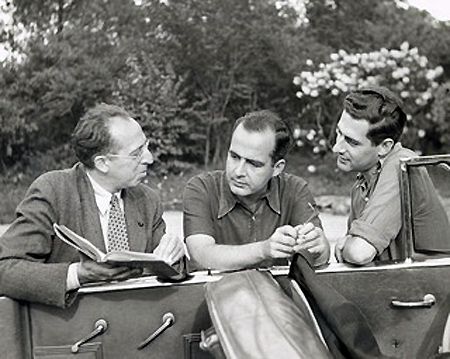
Menotti (right) and Barber (center) with Aaron Copland
Source: Koch CD (my rip!)
Format: mp3, 320k/s (CBR), DDD Stereo
File Size: 118 MB
Download Link – https://mega.co.nz/#!5wNhlA7I!UyGOYweskx57hHacY2nxG2AmmxhkiriZUzoIWTD a2-s
Enjoy! Don’t share! Buy the original! 🙂
***
No.464
As well as a number, some symphonies also have a title, often simply to distinguish them from the mass
and without any clear connection with the content. Haydn’s London Symphony, for example, so called because
it happened to be composed in that city. This is not the case with The Gothic Symphony, the Symphony
No.1 in A minor, by Godfried Devreese. Here the adjective is more than a commercial label. It is
the central image, the framework of the musical architecture. It is Gothic in its upward soaring, in its absence of
constricting wal1s and the appearance in their stead of many and ample windows, through which musical
impressions come streaming in like sunlight. It has the lightness and delicacy of the Ile-de-France, where
this style of architecture originated.
This Gothic concept is also reflected in its composer, in Godfried Devreese. Not in the sense of religious flirtation,
of sanctimonious dabbling with incense and medieval-clerical costume parties, but purely architecturally. We
see it a1so in the architects and the builders of those cathedrals. They were artists and craftsmen, because art
is craftsmanship. That is why they paid such attention to details, even to those which were never seen,
hidden behind the crenellations, or very high, invisible from the ground. They were perfectionists, honest
craftsman, miniaturists on a large scale, bursting with aesthetic sense.
The Poeme H???roique is one of Godfried Devreese’s first major compositions. He composed it in 1923,
basing it, as is indicated on the score, on "a legend recounted by Marguerite van de Wiele", an aunt of his by
marriage. Nobody knows the precise content of this legend, but that is also unnecessary, because it is extremely
visual. You can fill it in yourself, as long as you include a hero. Thanks to a brief but delightful violin solo, you
can even envisage a golden- haired princess. In this composition Devreese has drawn upon the memories of
his travels abroad, but otherwise, his impressionism is w hat he absorbed in France barely eight years before.
In French compositions, impressionism and the musical idea combine organically. In Devreese, the poetic idea
is paramount. It only becomes music later.
Devreese dedicated his In Memoriam to Willem Mengelberg, from whom he had learned an incredible
amount. Originally, In Memoriam was the second movement of a sonata for violin and piano, composed in 1924.
He orchestrated it during his time at the Concertgebouw in Amsterdam. "Orchestration terminee le 10 ao???t 1928"
is written at the end of the manuscript. So it is not an In Memoriam written on the occasion of Mengelberg’s
death in 1951; although it could have been one, as the finest tribute he could offer to his great
conducting example.
Music Composed by Godfried Devreese
Played by the Moscow Symphony Orchestra
Conducted by Fr???d???ric Devreese
"The Belgian violinist Godfried Devreese was a pupil of Ysa???e and C???sar Thomson. He led the Kurhaus Orchestra
in The Hague and was a member of the Concertgebouw Orchestra in Amsterdam, also working as a conductor in
Antwerp and Brussels. He spent some 29 years as director of the Malines Conservatory, establishing the city as an
important musical centre. The compositions of Devreese, romantic in general style, include concertos, symphonies
and a wide variety of works. His reputation as a composer has remained largely limited to his own country."
Source: Marco Polo CD (my rip!)
Format: mp3, 320k/s (CBR), DDD Stereo
File Size: 153 MB (incl. cover, booklet)
Download Link – https://mega.co.nz/#!V01z1BKR!IG-ZyAY0rV2DfXFUbexPpDNcGDwks6Qeh9YcNQ42keY
Enjoy! Don’t share! Buy the original! 🙂
the last posted recordings i own myself, need more time to hear all this fantastic music…endless thanks for your inspiration!
This is an album that lovers of fantasy film scores should appreciate!
With The Snow Queen (Lumikuningatar), the Finnish National Ballet scored a hit. This success was
due not only to Andersen’s wonderful story and its brilliant staging but also to the music of composer
Tuomas Kantelinen. He says he wanted "to write music that is melodic, beautiful and accessible, as
its principal function is to put viewers of all ages into a cheerful Christmas mood. It is a deliberate nod
towards the tradition of Christmas ballets for the whole family, such as Nutcracker. I had a great deal of fun
creating character dance pastiches that illustrate the conceptions that people have of the musical styles of
various countries." The principal characters are Kerttu and Kai, who are good friends. Kerttu finds the
missing piece of the Snow Queen’s mirror, and the Snow Queen kidnaps Kai to get it back. Kerttu wanders
far and yonder in search of Kai and finally ends up at the frozen castle of the Snow Queen.
Finland’s internationally most successful movie music composer Tuomas Kantelinen has written the music
for more than 30 films since the mid-1990s, including Puhdistus (Purge, directed by Antti Jokinen),
???ideist??? parhain (Mother of Mine, Klaus H???r???), Mindhunters (Renny Harlin) and Mongol (Serge Bodrov).
Kantelinen has received several awards at home and abroad for his film scores, including the Finnish
Jussi Award for Lunastus (The Redemption, 1997) and Rukaj???rven tie (Ambush, 1999).
Music Composed and Conducted by Tuomas Kantelinen
Played by the Finnish National Opera Orchestra
"The Snow Queen (Danish: Snedronningen) is a fairy tale by Hans Christian Andersen (1805???1875).
The tale was first published in 1845, and centers on the struggle between good and evil as experienced
by a little boy and girl, Kai and Gerda. The story is one of Andersen’s longest, and one of his most highly
acclaimed stories by readers and critics. It is regularly included in selected tales and collections of his
work and is frequently reprinted in illustrated storybook editions for children. The tale has been
adapted in various media including Disney’s most-recent animated film and television drama."
Source: Ondine CD (my rip!)
Format: mp3, 320k/s (CBR), DDD Stereo
File Size: 169 MB (incl. covers & booklet)
Download Link – https://mega.co.nz/#!pQhjwZRR!KBLCTGSt_DeROQGdm1l-OD1LYBAOH0MDzZUf76Bawc4
Enjoy! Don’t share! Buy the original! 🙂
Thank you Wimpel!
;O) since 1983 i collect cds, before that records are my thing…no idea how many that is, but so there are shelves in all about 100 meters length.
mostly orchestral and piano, some crossover and filmmusic, little chamber, or vocal works and operas…small amount jazz.
1400-till now.
popular music…hmm…owned only by my wife ;O)
I was asking to me if you have from Godfried Devreese – Variation and Themes, and Trombolene??? Thank you very much for your attention.
Leonardo
No.466
The Edwardian period, and indeed the late 1890s, is fascinating for the student of British music.
It saw the first appearance of what we now know as an extended repertoire of distinctively English
music (even though the composers of much of it were in fact Irish or Scottish and some of the
landscape that inspired them was on the Welsh border!). The big name as far as we are concerned
was, of course, Elgar. But at a time when provincial centres of music were of major importance,
Granville Bantock (1868-1946), associated with Birmingham from 1900 to 1934, was
regarded by some as comparable with Elgar. It was Neville Cardus, no less, who wrote: ‘Those
of us who were then “young” and “modern” regarded Bantock as of much more importance than
Elgar … Bantock was definitely “contemporary”.’ Indeed it was Elgar himself who referred to
Bantock as ‘having the most fertile musical brain of our time’.
Dante and Beatrice was originally written (as Tone Poem No.2) in the summer
of 1901 and performed at New Brighton and also in Birmingham at a Halford Concert. A
commentator on the first version, which is now lost, pointed out that when Bantock revised it
(the new score is dated 31 July 1910), little alteration was made in the music apart from the
blending of the sections into a continuous fabric. The early version was in six sections, and it
may be helpful to have the titles as a guide to the main episodes in the later version. These
were: ‘Dante’, ‘Strife of Guelphs and Ghibellines’, ‘Beatrice’, ‘Dante’s vision of Hell, Purgatory
and Heaven’, ‘Dante’s exile’, and ‘Death’. In the revision of 1910 recorded here, Bantock
styles his score a ‘psychological study’ intending to evoke states of mind rather than describe
individual episodes in detail.
In the 1930s he undertook examining tours overseas for Trinity College of Music and it was
while on one of these that he wrote the The Cyprian Goddess, his third symphony,
which he subtitled ‘Aphrodite in Cyprus’. Written while crossing the Pacific, the manuscript
full score is dated ‘12 January 1939 Pacific Ocean. Suva (Fiji)’. Bantock’s love affair with
languages led him to study not only Latin and Greek, but also Persian. The Pagan
Symphony had taken its cue from the second book of Horace’s Odes, and the
opening of Ode XIX concerning Bacchus. Aphrodite is, of course, the Goddess of Love,
whom he had invoked so memorably before in the Sappho Songs for contralto and
orchestra. Now in The Cyprian Goddess he prefaces the score with the two
Latin verses of Ode XXX in the first book, as well as a photograph of the statue of
the Venus de Milo from the Louvre. The music plays continuously, but consists of a
variety of contrasting sections, and the feeling of a story or succession of images is
striking. Why Bantock was never commissioned to compose for the films when he
writes so cinematographically is a mystery. Bantock gives us no detailed programme,
but from time to time he writes a classical quotation (in English translation) above the
score, thus indicating the major milestones, and effectively marking four movements,
each of several sections.
It seems highly probable that Bantock was thrilled by the early success of Elgar’s
Enigma Variations, and then he impulsively set out to write his own variations,
albeit based Pauline-like on his wife Helena’s moods rather than on his various friends
which Elgar had done. The Helena Variations was his first orchestral work in his
mature style. Could it be that in emulating Elgar by ending in high spirits it was not
only Helena he was celebrating in the Finale. First performed in Antwerp on 21
February 1900 where Bantock had been asked to conduct a concert of British music,
the Variations received their first British performance, conducted by the composer,
on 25 March in the Philharmonic Hall Liverpool.
Music Composed by Sir Granville Bantock
Played by the Royal Philharmonic Orchestra
Conducted by Vernon Handley
"Granville Bantock was a bearded, cigar toting, larger than life artist who might drop you
a line in Latin and who studied Ancient Greek and Persian as an agreeable pastime. He
seems pretty remote from our contemporary ideas of the creative aesthete. With his
smoking jacket on, no doubt wearing a cap complete with tassle, he composed massive
pieces like these three offerings on this magnificent CD in his Morris wallpapered Victorian
study. The Cyprian Goddess or Symphony No 3 was inspired by at least two sources
relating to the same subject: some Latin verse Odes of Horace referring to Aphrodite
and the sculpture of the Venus de Milo in the Louvre; thus he was thinking of both Greek
and Latin versions of the goddess of love, born on the beautiful island of Cyprus. One
wonders if Horace’s request for Aphrodite to ‘quit the favoured Cyprus and come’
somehow echoed with Bantock’s own love of the exotic and the consequent conflict
this must have had with his daily life in his more prosaic homeland. The Helena Variations
are a fascinating set of variations, as inventive as Elgar’s ‘Enigma’ Variations in their
way, in which his skill as an orchestral craftsman are displayed to the full. Dante and
Beatrice is a tone poem covering much of the same ideas as Liszt’s Dante Symphony.
Using a rich Richard Strauss size orchestra (but never his technique!), Bantock paints
a huge canvas, to my mind bringing the Lisztian tone poem to its fullest and most
eloquent flowering. In order to do this, Bantock is secure in all departments, form,
balance and restraint, the classical characteristics which mark him as different to the
more self-absorbed romantic, Richard Strauss or the doom laden Mahler. Bantock
would never have composed music about his home or sex life nor would he have
written a Symphony of a Thousand! He was too practical a musician for that, managing
local amateur and semi-professional ensembles in the depths of the north of England.
No gesamskunstwerk for him. The orchestral effects throughout are delightful, the
melodic invention everflowing and Handley, here on his best form, doesn’t overplay
the dynamics of tempo or crescendi or diminuendi. He unwraps a rich tapestry that
shows how an English composer could produce work that was as good, if not better
than the more feted continentals. Wonderful stuff!"
Amazon Reviewer
Source: Hyperion CD (my rip!)
Format: mp3, 320k/s (CBR), DDD Stereo
File Size: 163 MB (incl. cover)
Download Link – https://mega.co.nz/#!VgUmWTjK!YDqp1W7AZGZfsGk8x7XYOmxb_A07TV_qcYLxB98 7Xs4
Enjoy! Don’t share! Buy the original! 🙂
Gideon Fagan was born at Somerset West in the Cape Province of South Africa in 1904. He lived
in England for twenty-seven years before returning to his native country. The Karoo Symphony was
commissioned by the South African Broadcasting Corporation and completed by Fagan in 1976. Each
movement seeks to reflect different aspects of the vast, desert-like but beautiful interior of the Cape
Province known as the Great Karoo. In the first movement, a slow tempo is maintained throughout,
expressive of the peacefulness and calm one experiences in the Karoo. The second movement, the
Scherzo, performed in a "hushed" style, seeks to describe the "fauna and phantoms", the little creatures
of the bush which are mostly unseen, and "phantoms" which are commonly associated with the Karoo.
The scene fades away as the busy creatures relax into a state of repose. The third movement, described
as Calamity, reflects the tragedy of heavy storms breaking a protracted drought and causing large-scale
destruction as well as loss of life and livelihood. The idea of Karoo storms is carried into the fourth
movement which reflects the drama of the typically severe storm with its torrential rain, thunder
and lightning and high winds. But the rain also brings new life to the parched land and for miles
around the wilderness is transformed into a garden of wild flowers. Like the previous three movements,
the fourth movement fades away into silence, the silence of the Karoo which the composer found
"eloquent, inspiring and beyond all, all-absorbing???"
Michael Moerane, choral conductor, pianist and composer, taught music in various parts of the
Transkei and Lesotho while studying through the University of South Africa, becoming the first black
African to obtain a degree in music at a South African university. According to the composer, in a
note prefaced to the score, Fatse Le Heso (My Country) is based on thematic material derived
from freely-adapted African songs: a warrior’s song, a reaper’s song, a free transformation of a cradle-
song and a hymn which supplies the harmonic structure.
Henry Lissant-Collins was born in Liverpool in 1880 and emigrated to South Africa in 1902. A
versatile musician, being a composer as well as a performer on five instruments, he also pursued a
career in journalism, as music critic and newspaper editor. Fuquoi in the Sugar Cane has become
one of the ‘Classics’ in the South African orchestral repertoire, having been played on many occasions
by various South African orchestras over the past fifty years. "Fuquoi" is evidently Lissant-Collins’
English version of the Zulu U-Fookwe, which is the Burchell’s coucal, a rather shy bird, which likes to
nest in dense shrubbery. Fuquoi in the Sugar Cane is a model of sensitive scoring, an atmospheric
tone-painting which reveals the influence of Delius.
Music by Gideo Fagan, Michael Moerane & Henry Lissant-Collins
Played by the National Symphony Orchestra of the South African Broadcasting Corporation
Conducted by Peter Marchbank
"The first work, Theo Wendt’s "Four South African Folk Tunes", I found to be rather slight.
"Fuquoi in the Sugar Cane", written by Henry Lissant-Collins (born 1880 in Liverpool), is an
interesting rhapsodic character-sketch of the Burchell’s Coucal, a shy bird which likes to
nest in dense shrubbery. The twelve-minute tone poem "My Country" was written by Michael
Mosoeu Moerane (1909-1981) who holds the distinction of being the first indigenous African
to obtain a university degree in music in South Africa. The major work on the disc is a four-
movement "Karoo Symphony" by Gideon Fagan, which is a musical description of a very arid
area of South Africa. The first movement "Elevating Solitude" depicts the stark nature of the area,
"Fauna and Phantoms" is about the wildlife, "Calamity" describes the great damage that can
be done by storms, and the last movement "Storm Begets a Dream Garden" is about the after
effects of the storms, when the rain that has fallen brings the flora of the area to life.
The performances are good and the recording reasonable, in a fairly warm acoustic."
Amazon Reviewer
Source: Marco Polo CD (my rip!)
Format: mp3, 320k/s (CBR), DDD Stereo
File Size: 149 MB (incl. booklet)
Download Link – https://mega.co.nz/#!ZBhkBbwA!GOATKA2faKLABM-BVbuU4HMtmu4klYtc54eBECZNdgc
Enjoy! Don’t share! Buy the original! 🙂
Henri Lazarof was born in Sofia, Bulgaria on 12th April, 1932, and began his musical studies
at the age of six. He graduated from the Sofia Academy in 1948 and studied at the New Jerusalem
Academy of Music from 1949 to 1952 and with Goffredo Petrassi at the Accademia di Santa Cecilia
in Rome from 1955 to 1957. In 1957 he moved to the United States and studied at Brandeis University
on a full scholarship with Arthur Berger and Harold Shapero. He received his Master of Fine Arts degree
in 1959. In 1959 Lazarof moved to California, where he still lives, and took a position as teacher of
French language and literature at UCLA. Three years later he joined the University???s Music Department
and eventually rose to the rank of Emeritus Professor. In 1963 he organized the Festival of Contemporary
Music, which featured music and lectures by Luciano Berio, Karlheinz Stockhausen and Leonard Stein.
His international reputation received a boost in 1966 when he was awarded the first International Prize
of Milan for Structures Sonores.
For many years Lazarof had been quite taken with the artwork of the great Russian painter, Wassily
Kandinsky, the seminal figure in the evolution of abstract art. After an initially negative reaction to the
non-representational quality of French impressionist painters at an exhibition in 1895, Kandinsky came
far to exceed Monet and his colleagues in transcending the boundaries of realism. The child of musical
parents, Kandinsky learned the piano and cello while young and had a profound feel for music. He once
said that colour is the keyboard, the eyes the harmonies, the soul the piano with many strings. Like
Scriabin, he posited a strong connection between colour and musical harmony, associating tone with
timbre, hue with pitch, and so forth. He claimed to see colour when he heard music.
Kandinsky???s beautifully crafted abstract paintings manifest a rhythmic vibrancy that reflects his sense
of a musical-visual nexus. Perhaps it is that musical quality of his art that reinforced Lazarof???s
connection to Kandinsky???s works. A spur to the composer???s decision to translate his resonance to the
artist came from pianist Alexis Weissenberg, who encouraged Lazarof to compose a ???large orchestral
work, a kind of fresco???. With the support of Gerard Schwarz and the Seattle Symphony, which
commissioned Tableaux, Lazarof travelled to Paris, Munich and New York City, where he
viewed hundreds of Kandinsky???s painting. The resultant orchestral score is a bold, multi-hued
tapestry of stunning instrumental colours, with textures ranging from the spare and intimate to
the richly layered and voluminous.
Lazarof composed Icarus, a concerto for orchestra, in 1984, in response to a commission
from the Houston Symphony Orchestra. Wishing to connect the work to the city where it would
receive its first performance, the composer thought of the NASA space flight program, which is
centered in Houston. The ambition, achievements and occasional tragic setbacks of NASA???s efforts
led to thoughts of the mythical Icarus, who took flight on wings fashioned by his father, but
perished after flying too close to the sun. Icarus is not, however, a piece of programmatic or
descriptive music. Rather, its three movements convey something of both the ages-old desire
to escape the confines of our earth and the danger inherent in that desire.
In 1985 Lazarof composed Poema as a wedding gift for Gerard Schwarz and his wife, Jody.
Cast in a single movement, the piece begins with an introductory passage featuring ringing
chords and evocative sonorities that grow out of them. The main portion of the piece begins
with a trumpet (the instrument Gerard Schwarz played so masterfully before turning full-time
to conducting), which initiates a series of rhapsodic phrases that pass among several instruments.
Soon more powerful massed sonorities begin to punctuate the melodic lines, and the music
assumes an urgently dramatic character, several warmly romantic episodes notwithstanding.
At length Lazarof recalls the material of the introduction, thereby returning the music to its
point of origin.
Music Composed by Henri Lazarof
Played by The Seattle Symphony
With Garrick Ohlsson (piano)
Conducted by Gerard Schwarz
Source: Delos CD (my rip!)
Format: mp3, 320k/s (CBR), DDD Stereo
File Size: 150 MB
Download Link – https://mega.co.nz/#!h88A0azL!N8WHmUV6RLv9yH0x56YyJXyMRCoqLEzz6v_3ouL fWjA
Enjoy! Don’t share! Buy the original! 🙂
***
No.469
Essential for any collection of twentieth century English music, this disc contains the four
extant orchestral works of George Butterworth – his Two English Idylls, The Banks
of Green Willow, and A "Shropshire Lad" Rhapsody — in performances by Adrian Boult and
the London Philharmonic Orchestra of such complete conviction and deep affection that they might
well be dubbed definitive. Boult attended the premiere of A "Shropshire Lad" Rhapsody in 1913 and
gave the premiere of The Banks of Green Willow the following year at his first public appearance as
a professional conductor, and his understanding of and sympathy for Butterworth’s achingly sensual and
poignantly nostalgic music is absolute and unwavering. Anyone who wants to know where Vaughan
Williams came from and what Delius might have been should hear this music in these performances.
And that’s just the first 23 minutes. After Butterworth comes Peter Warlock’s half-contented, half-sad
An Old Song from 1917 and Patrick Hadley’s robustly passionate One Morning in Spring from
1942 followed by a set of four short orchestral pieces by Herbert Howells. The earliest – the moving
Elegy for viola, string quartet, and string orchestra from 1916 written for a friend’s death in the Great War –
invokes the solemn sound world of Vaughan Williams’ Tallis Fantasia. Next, the rambunctious Merry-Eye
from 1920 has the joie de vivre of a man on his honeymoon — which, in fact, Howells was. The atmospheric Procession
from 1922 has a crescendo-decrescendo structure recalling Borodin’s In the Steppes of Central Asia. The festive
Music for a Prince from 1948 written for the birth of Prince Charles has the good cheer of an Englishman
celebrating the monarchy honeymoon — which, in fact, Howells was. In every work from Butterworth through
Howells, Boult and the London Philharmonic & New Philharmonia give the music their all.
Music by George Butterworth, Patrick Hadley, Peter Warlock & Herbert Howells
Played by the London Philharmonic & New Philharmonia Orchestras
Conducted by Sir Adrian Boult
Source: Lyrita CD (my rip!)
Format: mp3, 320k/s (CBR), ADD Stereo
File Size: 160 MB
Download Link – https://mega.co.nz/#!RkdDlZZa!dfT4VyJP46lsyqHUNX_mQxUb2bERUXt0XU8omEV wBMk
Enjoy! Don’t share! Buy the original! 🙂
boult is one of my favorite conductors, not only for british composers.
The Jewish creative orientation of composer and organist Herman Berlinski (1910???2001) represents
a fertile synthesis. His Jewish roots and family traditions were fundamentally eastern European, but he also
acquired and adopted the cultural perspectives???and especially musical affinities???of German Jewry; his
Paris studies added 20th-century French as well as international influences; and eventually he emerged
as a thoroughly American composer and an ardent advocate of artistic innovations in the American Synagogue.
From the World of My Father is Berlinski’s reconstruction from memory of some of the music he wrote
and directed for PIAT, the ???migr??? Yiddish theatrical troupe in Paris between 1933 and 1940, during his sojourn
there as a refugee from Nazism. From the World of My Father displays a side of Berlinski’s musical
persona not generally associated with his work as a whole. Its transparently conservative, conventionally
melodic, and nostalgic perspectives may even surprise those familiar only with the later works that brought
him his major recognition. It draws liberally on perceived sounds, inflections, modalities, and idioms of the
melos associated in popular imagination with prewar eastern European Jewish life among the Yiddish-
speaking populace.
A shofar can be made from the horn of any legally permitted, i.e., "kosher," animal, except for an ox or a cow –
because of the association with the golden calf incident in the Bible. The ram’s horn, however, is preferred for
the Jewish holiday of Rosh Hashana because of the connection with the biblical story of the binding of Isaac
(akedat yitzhak) and Abraham’s substitution of a ram for the sacrifice???the assigned Torah reading for the first
day of Rosh Hashana and the theme of an important part of its liturgy. The shofar blasts are partly a
recollection of that patriarchal demonstration of faith and obedience. Like most of his liturgical music, Berlinski’s
Shofar Service was created for the Reform format. On the other hand, Berlinski deliberately designed
his piece in order to reintroduce the authentic shofar to many Reform congregations for whom it may have
been a new experience; and he specifically employed the traditional shofar calls, even if he recast them
within his more classical stylization.
Symphonic Visions for Orchestra (1949) is an elaborately scored semi-programmatic tone poem
inspired by individual biblical images, passages, and sentiments. The biblical quotations are intended as mood
indicators, and the movements are scored to evoke both the emotions of those quotations and their applicable
historical or narrative contexts. Critics have observed the influence of Mahler in the work’s orchestral power
and harmonic richness, at the same time intuiting an admittedly amorphous "Hebraic character."
In that connection, comparisons have also been drawn to Ernest Bloch’s biblical evocations.
Music Composed by Herman Berlinski
Played by The Seattle Symphony & Barcelona National Orchestras
And the BBC Singers and soloists
Conducted by Gerard Schwarz & Avner Itay
"There are passages in Berlinski’s work of such aching beauty that if you are not moved to
tears you are made of sterner stuff than I am."
Jerry Dubins, Fanfare
"[From the World of My Father is]…a work of colourful, touching personality….Symphonic
Visions for Orchestra shows Berlinski’s mastery of mood and instrumental shading."
Donald Rosenberg, Gramophone
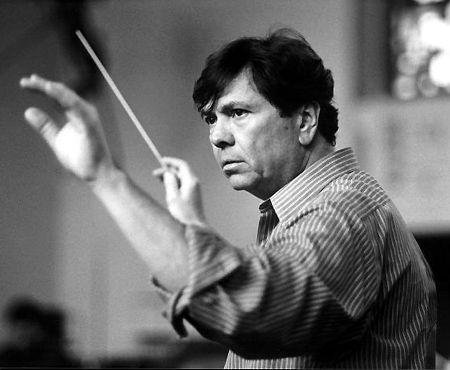
Gerard Schwarz at the Berlinski sessions.
Source: Naxos "Milken Archive" CD (my rip!)
Format: mp3, 320k/s (CBR), DDD Stereo
File Size: 159 MB (incl. booklet)
Download Link – https://mega.co.nz/#!go9xkJIS!GbreGDB6ShVAMOfjoDYRM0YH3ypHtmkmUq26cNY 4eMA
Enjoy! Don’t share! Buy the original! 🙂
***
No.471
This is the third album of music by Igor Markevitch (1912-1983) in the course of this thread,
and it features his abandoned ballat L’Envol d’Icare, which he later reworked into a tone poem.
The earlier posts also showcase ballets, R???bus and Le Nouvel Age.
It is undoubtedly more than coincidental that at nineteen Markevitch should have turned to the Icarus
myth for his first truly individual work, L???Envol d???Icare, a score which he continued to re-work in various
forms for more than a decade. Icarus, who flew too close to the sun and fell to earth embodies a vivid image
of the fate of the young composer, swept along by the frenetic Paris of the 1930s. Indeed, the most striking
passage of Icare is the lengthy, hypnotic, ecstatic-obsessive ???Death??? that concludes the work, occupying
nearly one third of its duration.
The series of large-scale works that followed over the following brief eight years is a succession of masterpieces
in constantly changing languages. R???bus and Le Nouvel ???ge both embody a Prokofiev-like grittiness married
to that motoric ???moto perpetuo??? quality that so typifies the music of Albert Roussel, but in a more pointed
harmonic framework, and continuing the exploration of multiple simultaneous polyrhythms that are Markevitch???s
trademark. L???Envol d???Icare remains the singular work among his masterpieces, whether for its ascetic, pointillistic
scoring; its visionary use of quarter-tone tuning, harmonically so precisely calculated; its brilliant exploitation of
complex rhythmic simultaneities; or the sheer unique sound-world that it evokes from the orchestra. Above all, for
the poise and emotional charge of its hypnotic ???Death???.
The achievement of Igor Markevitch bridges important gaps in our understanding of the period between the wars.
His language is aggressively individual. Not neo-classical, it has classical restraint and a poise that is almost frigidly
disciplined. In an ???sthetic distant from the transmuted romanticism that propels the music of Berg and Schoenberg,
he initiated an exploration of dissonance (through polytonality) that the perspective of the 1990s can readily
identify as a fertile harmonic path. Dissatisfied with what he seems to have perceived as the indulgent prettiness
of impressionism, he sought a purity and detachment of style which were rare in this interbellum period of excess.
Thus the most singular features of the startlingly original Flight of Icarus, are above all, its use of quarter-tone
scordature in one flute, two solo violins and two solo cellos within the orchestra; and the pervasive presence of
complex polyrhythms. It is not hard to imagine that the microtonal retunings resulted in some way from the
???oriental??? experience of the opium pipe, though Markevitch is at pains to describe that ???certain chords could not
be perceived in an exact manner???.
When, after an interval of nearly forty years, Markevitch heard Cantique d’ Amour again towards the end
of his life, he gently rebuked it for having too much "magic" and for sounding "too good". This short composition,
orchestrated with a luxuriant vocabulary worthy of Ravel, feather-bedded with harmony redolent of Scriabin, is
unique in his output. Its rich language was , soon rejected for the astringent, almost violently energetic classicism
of Le Nouvel Age as he prepared to enter his own New Age, an age of performing the music of others,
untrammelled by the burden of his own creativity.
Music Composed by Igor Markevitch
Played by the Arnhem Philharmonic Orchestra
Conducted by Christopher Lyndon-Gee
"Why Igor Markevitch, one of the most distinguished conductors of the 20th century, should have so assiduously
ignored his own works is one of music???s great mysteries. He had spent his formative years in Switzerland studying
the piano with his father, and as a precociously gifted teenage composer captured the attention of influential
musicians, including the ballet impresario, Dyagilev. Then at age of twenty-nine he suffered a severe and never
understood illness, and on his recovery moved to a life as a touring conductor and renounced the success his works
had enjoyed, never again composing. This complete cycle of his orchestral works are the first time they have ever
???apart from one brief work???appeared on disc. This third volume covers the period 1930 to 1936, and though we
find passages incorporating an element of atonality, he was using tonality as the basic ingredient. The earliest work,
the Concerto Grosso, comes from his eighteenth year, and I find a greater influence of Stravinsky than most
commentators. Abstract in concept, it is in the form of two fast movements surrounding a slow and rather severe
andante. L???Envol d???Icare (The Flight of Icarus), was his most highly regarded work, and was first planned for use
as a ballet. It toys with quarter-tones and the unconventional use of instruments, the resulting colours being
fascinating, though for those just coming to Markevitch, the Cantique d???Amour (Hymn of Love) is an ideal starting
point, its mysterious quality coming from a mix of Ravel and Debussy. The Arnhem Philharmonic Orchestra, under
the advocacy of the conductor, Christopher Lyndon-Gee, are totally persuasive and hide so convincingly the fact
that the music must have been previously unknown to them. The disc was first issued on Marco Polo as world
premi???re recordings and are in a reliable studio sound."
David’s Review Corner
Source: Marco Polo CD (my rip!)
Format: mp3, 320k/s (CBR), DDD Stereo
File Size: 132 MB (incl. booklet)
Download Link – https://mega.co.nz/#!ZkEgzCqR!L3VVUA9EQq6WeeinJGHNvEvkdS9YXUayptlUE0J pJ-Q
Enjoy! Don’t share! Buy the original! 🙂
Hats off, wimpel!
The Execution of Stepan Razin, Dmitri Shostakovich???s symphonic poem for baritone,
mixed chorus and orchestra, is an intentionally ambiguous work that operates on two levels. Its
manifest content, to use Freud???s term, relates to the seventeenth-century Cossack rebel who led
an unsuccessful revolt against Tsar Alexis I, father of Peter the Great. Captured, tortured and eventually
beheaded in 1671, Razin became a posthumous folk-hero, a symbol of the downtrodden and
disenfranchised individual standing up to entrenched, brutal power. As a son of the Revolution,
Shostakovich composed this cantata-like work to celebrate the life of Razin and by extension, all
ordinary people who fought the great ongoing battle against repression. At the same time, the latent
content (to continue with Freud???s phraseology) points tellingly toward Soviet repression personified
by Stalin and his minions. Though Stalin had been dead for more than a decade when Shostakovich
composed this work in 1964, Stepan Razin made party loyalists squirm since it could be taken
as both a celebration of revolutionary fervour and a condemnation, not of Soviet Realism, but of Soviet
reality. Adding to the apparatchiks??? discomfort, the text for Stepan Razin came courtesy of Yevgeny
Yevtushenko, who had already denounced Russian anti-Semitism in Babi Yar, which Shostakovich
had used in his Symphony No. 13. The baritone soloist in Stepan Razin serves as both narrator and
the eponymous Cossack leader.
One of Shostakovich???s last orchestral works, composed fourteen years after Stalin???s death in March
1953, was the tone poem October, Op. 131, which received its premi???re in October 1967. It was
not the first time the composer had commemorated the October Revolution: both the Second and
Twelfth Symphonies bore musical witness to that signal event in Russian/Soviet history. The 1967 score,
commemorating the Golden Anniversary of that iconic event, is a short tone poem.
Shostakovich composed his rarely heard Five Fragments (1935) as experimental ???practice runs??? for
his Fourth Symphony. They are brief aphoristic utterances in a spare style redolent of Schoenberg,
Berg and Webern. The first two Fragments are rhythmically quirky and tersely ???modernistic.??? No. 3 is slow
and pensive, with long-held notes high in the violins. Short though it is (though it is the longest movement
at a little under four minutes), it is strangely affecting, both sad and tender. No. 4 begins with bassoon
soon joined in counterpoint by clarinet, then oboe, followed by the arrival of strings in the final minute.
The edgy fifth number opens with snare drum and violin, recalling the life/death battle between the
devil and the hapless soldier in Stravinsky???s L???Histoire du soldat.
Music Composed by Dmitri Shostakovich
Played by The Seattle Symphony and Chorale
With Charles Robert Austin (bass)
Conducted by Gerard Schwarz
"The Execution of Stepan Razin is a sort of sequel to the 13th Symphony, in that it sets a poem by
Yevtushenko and even shares some thematic elements. It really is a magnificent work, and at half
an hour, a major statement. Shostakovich put all of his considerable skill as a composer of film music
into making the accompaniments as colorful as possible, while the choral writing and passages for
bass solo are thrilling. Why it???s not better known remains a mystery: it deserves to be as popular
as Prokofiev???s Alexander Nevsky or Rachmaninov???s The Bells.
This is a very exciting performance, with fine work from the chorus and a terrific orchestral
contribution making for climaxes of terrifying impact. Bass soloist Charles Robert Austin lacks the
last degree of Russian depth to his tone, and he has a tendency to shout in order to compensate
for the lack of weight, but he gets through the part with his honor intact. If you don???t know this
spectacular piece, here at last is an easy and inexpensive way to hear it.
I enjoyed the couplings too, though they are not significant Shostakovich. October is a typical piece
of Socialist Realism close in tone to the 12th Symphony, but it???s very exciting and effectively
written, and only the obligatory triumphant ending, which Shostakovich makes no attempt to
reconcile with the tone of the rest of the piece, lets it down a bit. Once again, the performance
has the necessary grit and drive.
The Four Fragments bear a slight relationship to the music of the Fourth Symphony (the goofy
waltz in the finale, especially), but are so, well, fragmentary that I wonder why they are played at
all. In last analysis, they remain a curiosity and little more, but I can???t argue with including them
to round out a program nicely organized as ???sequels and prequels??? to various symphonies. Very
fine sound, with a big, rich bass response that suits the music well, seals the deal. Essential for
Shostakovich fans."
Classics Today
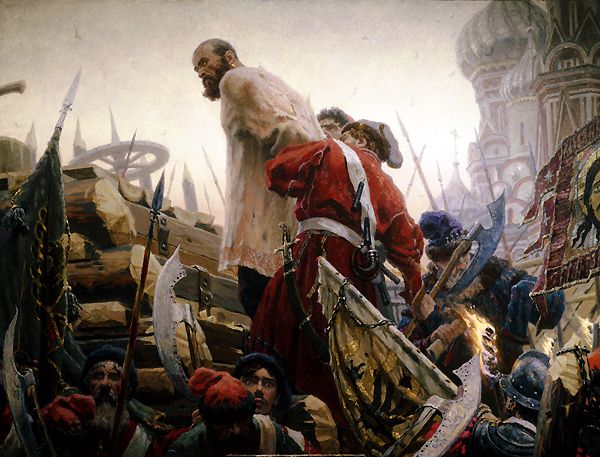
"The Execution of Stepan Razin" by Sergei Kirillov.
Source: Naxos CD (my rip!)
Format: mp3, 320k/s (CBR), DDD Stereo
File Size: 123 MB (incl. cover, booklet)
Download Link – https://mega.co.nz/#!IEBH0AyY!JjULCg74zTgr2OQ8S2O6CVPDs8R29uubd_6UGXh 6VWc
Enjoy! Don’t share! Buy the original! 🙂
Ingvar Natanael Lidholm (*1921) is a Swedish composer. Ingvar Lidholm was born in J???nk???ping.
He was a pupil of Hilding Rosenberg from 1943 to 1945, becoming a viola player with the Royal Swedish
Opera Orchestra. Having been awarded the Jenny Lind Fellowship for 1946???7, he travelled to France,
Switzerland and Italy. He was musical director of the "???rebro Orchestral Society" from 1947 to 1956.
Lidholm was a member of Karl-Birger Blomdahl’s controversial radical "Monday Group". His early style
was influenced by Igor Stravinsky, B???la Bart???k and Paul Hindemith. Later he became atonal, and sometimes
serial. He taught composition at the Kungliga Musikh???gskolan i Stockholm (Royal Swedish Music College)
from 1956 to 1965. He wrote Poesis (1963) for the 50th anniversary of the Stockholm Philharmonic,
which was a far more radical piece than they had expected. This work was his last to use the 12-tone
serial technique. After that, he turned away from this complex style and adopted a simpler, hymn-like
approach. He was still experimenting with electronic music in 1971.
Between Poesis and Greetings from an Old World there was a gap when he wrote no
orchestral music. He quotes from a song by Heinrich Isaac in the latter. Similarly, in Kontakion
he uses Russian Orthodox choral music. Somewhat like Benjamin Britten his music is a kind of bridge
between early music, and the avant-garde.
Music Composed by Ingvar Lidholm
Played by the Royal Stockholm Philharmonic Orchestra
Conducted by Gennady Rozhdestvensky
Source: Chandos CD (my rip!)
Format: mp3, 320k/s (CBR), DDD Stereo
File Size: 151 MB (incl. cover, booklet)
Download Link – https://mega.co.nz/#!s4dw3DjS!d4YLUkRaSgpETi6vdWrbK2FhRktyDWaTIT4iXFN WsTY
Enjoy! Don’t share! Buy the original! 🙂
***
No.474
Irving Fine was born in Boston, Mass., on 3 December 1914 and first studied piano; he was
an admired pianist throughout his career, and was particularly esteemed by colleagues for his
sight-reading ability. Fine went to Harvard University, attending the composition and theory classes
of Edward Burlingame Hill and Walter Piston; he received his BA in 1937 and his MA a year later;
at Harvard he also studied choral conducting with Archibald T. Davidson and, at Tanglewood,
orchestral conducting with Serge Koussevitzy. In 1938-39 he attended Nadia Boulanger???s
composition classes at Fontainebleau.
Fine???s music initially shows the impress of Stravinsky???s neo-classicism, but a more Romantic elemen
t combined with Fine???s essential lyricism from around 1950 onwards, most notably in the Notturno
for strings and harp of 1950-51 and the Serious Song (subtitled "A Lament for String Orchestra")
of 1955. An interest in the twelve-tone system began to colour his music during the 1950s, but Fine
never went all the way towards serialism; instead, it allowed him to accommodate a higher degree of
dissonance in his music without compromising its textural clarity. All these influences combined in his
final and most important work, the Symphony of 1962 (an opera and a violin concerto were
unfinished at the time of his death). The Symphony has a powerful onward thrust, animated by
jagged, driving rhythms and bold, confident gestures. Fine conducted its premiere less than two weeks
before he died.
Music Composed by Irving Fine
Played by the Moscow Radio Symphony Orchestra
Conducted by Joel Spiegelman
"Irving Fine, a composer roughly contemporary with Bernstein and who died young,
made his career in Boston and taught for many years at Harvard and Brandeis. He didn’t
write much and probably destroyed more than he published. Music of exquisite workmanship,
however, survives. Unlike Barber, Bernstein, or Copland, he never had a hit, but like Walter
Piston and Roger Sessions, he became a "composer’s composer." To some degree, it’s an
unfortunate label, because it calls up in people’s minds the evil bogeyman of the Academic
Composer, out to destroy the Good, the Beautiful, and the True (in favor of the Bad and
the Ugly) in music forever. Fine’s music, however, is bright and beautiful, rhythmically
exciting, argumentatively attractive and focused, and glittering in its colors. If you like
Stravinsky’s P???trouchka or "Dumbarton Oaks" Concerto, you should have no trouble at all
with Fine. Nevertheless, although Fine got much from Stravinsky, there’s very often a
personal element, deriving from American pop and jazz ??? highly sublimated, often just a
turn of melody ??? that give his works a bigger, more open emotional quality than Stravinsky
normally delivers.
Around Fine’s death in the 1960s, the Boston Symphony Orchestra released a recording
of Leinsdorf conducting the Toccata Concertante and A Serious Song and of the composer
conducting his own Symphony. This turned me on to Fine. As it happens, Fine also wrote
some of the best American choral music ??? The Hour-Glass Suite (on poems by Ben
Jonson), The Choral New Yorker, and a series of pieces on lyrics from Alice in Wonderland
and Through the Looking-Glass ??? all of which I got to sing. The lack of any extraneous
or unnecessary note marks his music, as does directness of expression ??? the mark not
only of a great miniaturist, but of a composer with something to say. Much of Fine’s output
is in miniatures, but by the end of his brief life he had expanded the stage for his ideas.
There’s nothing miniature about the Symphony ??? a big, noble, passionate work that
deserves a larger audience. It seemed to take Fine a long time to move from one to
the other, however ??? under normal circumstances, a reasonable expectation ??? but
Fine died young, just after he had, I think, really found himself. A violin concerto and
an opera remained unfinished.
"Blue Towers" ??? in Paul Moor’s great phrase, "Fine’s finer version of a college football
pi???ce d’occasion" ??? immediately winning, with no condescension in craft, breezes along
like an Isham Jones tune, full of big strides and open spaces within its three minutes.
Music for Orchestra began life as Music for Piano. Joel Spiegelman, the conductor,
orchestrated them. The little pieces are very Stravinskian indeed, borne out by the
dedication to Nadia Boulanger. Spiegelman’s orchestration emphasizes this, with
colors coming from the "Dumbarton Oaks" part of the Stravinskian palette. Actually,
the scoring is very close to the orchestral music Fine was writing in Forties (when
he wrote the piano pieces). I congratulate Spiegelman on his ear and, paradoxically,
on his imagination. He has not given us a "one-color-fits all" or the standard box of
instrumental Crayolas, but an orchestration full of delightfsurprises. My favorite
movement consists of a set of variations, especially the first one, a gorgeously
singing andante, that shows, among other things, how Copland and Stravinsky
connect. The subsequent allegro canonic duet between flute and oboe both delights
and sets the blood racing.
Toccata Concertante represents the apex of the Stravinskian Fine, and (with Talma’s
Toccata for Orchestra) it’s one of the great masterpieces of neo-classicism, and not just
the American branch either. Throughout its 11 minutes, it shows a composer really
grappling with the problem of expanding the emotional range of neo-classicism while
exhibiting formidable logic and craft. The entire work grows from one very arresting idea.
It has nothing to apologize for, even in the company of Stravinsky’s Symphony in
Three Movements and Symphony in C. It blazes, it smokes. I sometimes wonder how
Fine (and several other composers) could have refined their craft to this extent without
the support of Koussevitzky and the Boston Symphony. At any rate, I prefer the
performance of Leinsdorf and the Boston Symphony Orchestra (as far as I know, not
currently available) to that of Spiegelman and the Russians ??? more driving and sharply-
articulated, more brilliant in tone ??? although the high quality of the work comes
through in both.
Fine’s Symphony represents his most extended work in the serial vein. I know that once
I mention "Schoenberg" or "serial," most people will just shut me off. But it’s Schoenberg
with a difference. I’m convinced that it’s not Schoenberg’s atonality that puts people off,
but his rhythm and phrasing, derived from post-Tristan habits of melody and orchestration.
If you didn’t know Fine’s symphony were serial, I doubt it would occur to you. The thing
dances. The "Capriccio" second movement drives as much as the Toccata Concertante.
Throughout the symphony, the gestures are sharp and memorable, the rhythm clearly
defined, as opposed to the aural slough of boops and squeaks most people think of
when they think of atonality. It’s Schoenberg with a difference. Fine hadn’t wasted the
years spent with the ballet-master Stravinsky. What the change seems to do to Fine’s
music is open it up emotionally, to make it more passionate by removing the little
ornamental hedgerows of neo-classical galanteries. The hardest movement is the "Ode"
finale, but it also plunges the deeps. The ideas appear with such definition, the listener
tends to retain them. Fine even manages to end nobly ??? something most serialists
find hard. I don’t believe you need know anything about the dodecaphonic method of
composition to recognize and respond to the magnificence of this finale."
Classical CD Review
Source: Delos CD (my rip!)
Format: mp3, 320k/s (CBR), DDD Stereo
File Size: 147 MB (incl. cover)
Download Link – https://mega.co.nz/#!5tlRXAbK!Qbl5lUF7fALqikYf3K2XrU46z-0fFo0A9FMAVPBXbD0
Enjoy! Don’t share! Buy the original! 🙂
Boris Ivanovich Tishchenko (also: Tischenko, or Tischtschenko), Russian Бори́с Ива́нович Ти́щенко;
1939–2010) was a Russian and Soviet composer and pianist. He studied at the Leningrad Musical College
from 1954 to 1957. There he learnt composition under Galina Ustvolskaya and piano under Mikhelis.
Then from 1957 to 1963 he studied composition with Vadim Salmanov, Victor Voloshinov and Orest
Evlakhov, and piano with L. Logovinski at the Leningrad Conservatory. He took a postgraduate course
with the composer Dmitri Shostakovich from 1962 to 1965. He taught at the Leningrad Conservatory
from 1965, and became a professor there in 1986.
Tishchenko’s music style and composing manner shows him to be a typical representative of the Leningrad
composers’ school. He was very much influenced by music of his teachers Dmitri Shostakovich and Galina
Ustvolskaya, turning these influences in his own way. He tried to use some experimental and modernist
ideas like twelve-tone or aleatoric techniques, but was much more attached to the native traditions
of his homeland.
The symphony as a form is critical to Tischenko’s ouput. The notes tell us that there are seven numbered
symphonies plus the French Symphony (after Anatole France), The Blockade Chronicle Symphony and
‘the majestic cycle of Dante Symphonies.’. His second violin concerto is termed a ‘violin symphony’.
Music Composed by Boris Tishchenko
Played by the Leningrad Philharmonic Orchestra
Conducted by Andrey Chistyakov & Edward Serov
"The First Symphony is in five movements – as is his sixth – and dates from his student years.
The work begins in an enchanted evocation of northern nights. It gradually aggregates tension to the point
of unbearable strain. In doing so it recalls the music for the Teuton Knights in Prokofiev’s Alexander Nevsky.
The music then relaxes back into a sort of tense serenity underpinned by gong strokes. After that Moderato
comes a similarly lengthy Andante. This develops the aurora of ecstasy again with a strained intensity bearing
some spiritual relationship to Eduard Tubin’s Sixth Symphony. It is macabre and tragic all at once. The braying
trumpets leave us in no doubt that this music is steeped in acidic grief. A softened sentimental element
comes with a soprano vocalise. The macabre returns for the feral blast of the short Presto with its
vituperative drum-kit cannonade. The succeeding Allegretto offers some slight relaxation – but not much.
The finale brings together a sense of awful apocalypse and trenchant triumph. This is expressed with an
awesome whirlwind of climactic emphasis.
The Blockade Chronicle Symphony shows the composer at full maturity with a massively inventive
palette of sounds. The music tracks through devastation as it is happening: falling buildings, wailing salvos of
assault-rockets, the sounds of haunted desolation. Redemptive elements include hints of the sort of orison-
hymnal drawn from Panufnik and an exhausted benediction. Strangely downward-sliding shrieks and soloistic
instrumental voices reach in despair out of the orchestral skein. The music rises to further protest and then
sinks again. A waltz ostinato emerges expressively, rather as it does in the final movement of Tischenko 6.
The brass call out in extraordinarily triumphant music. The scorch and inbuilt harshness of the brass writing
sounds a little like Jan???ček. Tischenko sustains the triumph with extraordinary tenacity across page after
page but then allows this to end and in saunters that waltz again. As Denisov writes, that waltz embodies
the past ‘living in our memory and never surrendering to oblivion’."
Musicweb
Source: Northern Flowers CD (my rip!)
Format: mp3, 320k/s (CBR), ADD Stereo
File Size: 198 MB (incl. cover & booklet)
Download Link – https://mega.co.nz/#!NQhlUAyC!HFnCY1nFgWh_Xi_h0F9yxzBccCAuL_RmJRDhzLF EkOM
Enjoy! Don’t share! Buy the original! 🙂
Eyebrows would have been raised at the Op???ra Comiquein 1937 at the notion of a ballet set in
Reading Gaol, not to mention at the author of the poem that inspired the ballet and the background
of his personal experiences as a convict. The way Jacques Ibert understood and transmitted
Oscar Wilde???’s humanitarian message with its moving account of the harsh prison atmosphere,
dominated by the story of a man who murdered his beloved, astonished and impressed that first
audience against all expectation. Ibert originally conceived La Ballade de la Ge???le de Reading
as a symphonic poem, writing the work between 1920 and 1922. The first performance took place
on 22nd October 1922 at the Paris Concerts Colonne, when it was conducted by Gabriel Piern???,
to whom it is dedicated. The sections of the piece correspond to those of Wilde’s poem in
its French translation. Ibert’s first symphonic work, though still influenced by Debussy, Ravel
and Dukas, is an extremely mature and powerful score, masterly in its orchestration.
The Trois Pi???ces d eBallet, Les Rencontres, was inspired less specifically than Elgar’s
Enigma Variations of 25 years before. Ibert’s mother, who was a music-lover and a sculptress,
kept an artistic salon at her house, where intellectuals and society friends would gather. Ibert
decided to portray some of these characteristic guests in music, at first in a set of five piano pieces
which he called Rencontres, written in 1921-22. Two years later he orchestrated them and entitled
a selection of three numbers Trois Pi???ces de Ballet. In the case of any stage performance,
choreography was left to the imagination of anyone who cared to stage the work, as Nijinska
did at the Paris Op???ra in 1925. The present recording makes use of the three-part concert suite.
Trois Pi???ces de Ballet foreshadows that colourful and witty mixture of neo-classicism and
the music-hall style of the 1920s of Ibert’s maturity.
As its title reveals, F???erique (1924) brings us into a fairy world and is correspondingly
orchestrated. Impressionistic in mood, in common with much of Ibert’s music of this period.
It contains a central section of scherzo-like character, rising to a climax at the recapitulation,
in which the original lyrical theme re-appears, culminating in a glowing and rhythmically
affirmative tutti. An exciting discovery among Ibert’s early compositions, Chant de Folie
was inspired by the horrors of war which the composer had himself experienced as a young man.
It was completed in 1923-24 and dedicated to Sergey Koussevitzky. This short and dramatic
setting for mixed chorus and large symphony orchestra is based on an implacable and vigorous
marching rhythm. At first tonal, the harmonies thicken and increase in dissonance.
Ibert’s music for Shakespeare’s A Midsummer Night’s Dream, an interesting discovery,
makes a worthy addition to the music for the play by Mendelssohn. The composer compiled the
Elizabethan Suite from his score for a Marseilles performance of the play in 1942. Four of
its movements are neo-classical adaptations of pieces by Elizabethan or post-Elizabethan English
composers, John Blow (Pr???lude), John Bull (Entr???e), Orlando Gibbons (Cort???ge) and Henry Purcell
(Final). An additional English theme, the sound of Big Ben, is humorously quoted in Dancerie.
Music Composed by Jacques Ibert
Played by the Slovak Radio Symphony Orchestra
With the Slovak Philharmonic Choir
Conducted by Adriano
"The Ballad of Reading Gaol"
I (Track 1)
He did not wear his scarlet coat,
For blood and wine are red,
And blood and wine were on his hands
When they found him with the dead,
The poor dead woman whom he loved,
And murdered in her bed. (…)
And so he had to die. (…)
I never saw a man who looked
With such a wistful eye
Upon that little tent of blue
Which prisoners call the sky,
And at every drifting cloud that went
With sails of silver by. (…)
He only looked upon the sun.
And drank the morning air. (…)
For strange it was to see him pass
With a step so light and gay,
And strange it was to see him look
So wistfully at the day,
And strange it was to think that he
Had such a debt to pay.
II (Track 2)
That night the empty corridors
Were full of forms of Fear,
And up and down the iron town
Stole feet we could not hear,
And through the bars that hide the stars
White faces seemed to peer. (???K)
The hangman, with his little bag,
Went shuffling through the gloom. (…)
The grey cock crew, the red cock crew,
But never came the day:
And crooked shapes of Terror crouched,
In the corners where we lay:
And each evil sprite that walks by night
Before us seemed to play.
They glided past, they glided fast,
Like travellers through a mist:
They mocked the moon in a rigadoon
Of delicate turn and twist,
And with formal pace and loathsome grace
The phantoms kept their tryst. (…)
About, about, in ghostly rout
They trod a saraband:
And the damned grotesques made arabesques,
Like the wind upon the sand! (…)
But with flutes of Fear they filled the ear,
As their grisly masque they led,
And loud they sang, and loud they sang,
For they sang to wake the dead.
III (Track 3)
The morning wind went wandering round
The weeping prison-wall: (…)
With sudden shock the prison-clock
Smote on the shivering air,
And from all the gaol rose up a wail
Of impotent despair,
Like the sound that frightened marshes hear
From some leper in his lair. (???K)
We saw the greasy hempen rope
Hooked to the blackened beam,
And heard the prayer the hangman’s snare
Strangled into a scream. (…)
They hanged him as a beast is hanged! (…)
But hurriedly they took him out,
And hid him in a hole.
The warders stripped him of his clothes,
And gave him to the flies. (…)
And there, till Christ call forth the dead,
In silence let him lie:
No need to waste the foolish tear,
Or heave the windy sigh:
The man had killed the thing he loved,
And so he had to die.
Source: Marco Polo CD (my rip!)
Format: mp3, 320k/s (CBR), DDD Stereo
File Size: 157 MB (incl. cover & booklet)
Download Link – https://mega.co.nz/#!ththXb6C!JpfjV3Vl_ReCtCCtEfiLcweQa6pI_Q5AjnAk4kR faiA
Enjoy! Don’t share! Buy the original! 🙂
A pupil of C???sar Franck and of Widor, Charles Tournemire (1870-1939) continued the French
tradition of organist-composers. Much of his music is deeply rooted in his Catholic faith, in which he
found a refuge and solution to the horrors of contemporary materialism. The Russian associations
the Moscow Symphony may have been a key factor: in marked contrast to the earlier issues,
the orchestra here sound at home from the very first bar, and the jolly tintinnabulations of the
dance-like scherzo come off very well. Tournemire started the Third Symphony after a trip
to Russia in 1911. The CD cover details its title as "Moscow 1913", though both Grove and Joel
Marie Fauquet’s notes omit "1913", merely the year of completion and not indicative of any
programme concerning pre-Great War Russia. As its title suggests, Symphony No.8 (1920-24;
Fauquet’s notes give conflicting completion dates three years apart) had a baleful inspiration – the death
of the composer’s wife in 1919. Tournemire became receptive to modern trends around this time, which
might explain the score’s more elusive atmosphere and resonances of Debussy, Holst and Prokofiev.
Music Composed by Charles Tournemire
Played by the Moscow Symphony Orchestra
Conducted by Antonio de Almeida
"This release marks a lovely conclusion to this courageous survey of Tournemire’s
symphonic oeuvre….we will remain deeply indebted for many years."
Fanfare
Source: Marco Polo CD (my rip!)
Format: mp3, 320k/s (CBR), DDD Stereo
File Size: 171 MB (incl. booklet)
Download Link – https://mega.co.nz/#!wcgGASAD!A5TSwRTMOratDokwxaSK4iYsnyQlEtPj2mf-N4CVkAg
Enjoy! Don’t share! Buy the original! 🙂
http://i1084.photobucket.com/albums/j415/wimpel69/ct_disc-of-the-month_zps989dac5f.gif http://i1084.photobucket.com/albums/j415/wimpel69/Gram_ContempoComposition_zps290409b3.gif http://i1084.photobucket.com/albums/j415/wimpel69/Gram_Orchestral_zps4e56999c.gif
Hailed as one of the most successful woman composers of all time in The New Yorker magazine,
Joan Tower (*1938) was the first woman ever to receive the Grawemeyer Award in
Composition in 1990. She was inducted in 1998 into the American Academy of Arts and Letters,
and into the prestigious Academy of Arts and Sciences at Harvard University in the fall of 2004.
The same year, she was honored by Carnegie Hall with an all-Tower concert as part of their Making
Music Series. In 2006 she received an Honorary Doctorate from the New England Conservatory.
Since 1972 Tower has taught at Bard College where she is Asher Edelman Professor of Music. She
is Composer-in-Residence with the Orchestra of St. Luke’s (since 1997) and the Deer Valley
Festival in Utah (since 1998), a position she also held with the Saint Louis Symphony Orchestra
(1985-1988) and the Norfolk Chamber Music Festival (1995-2003).
Imagine what would happen if the entire classical music world banded together. What sort of
power could they wield? In a project spearheaded by the American Symphony Orchestra
and Meet The Composer, and fueled by funding from Ford Motor Company Fund and the National
Endowment for the Arts, a group of 65 smaller budget American orchestras did just that in 2001.
This collective power was not about financial gain or political clout. These orchestras joined forces
to create something that was uniquely theirs, and in the process the largest commissioning
consortium in history was born. The result of their ground-breaking collaboration was a new
composition of pure Americana by Joan Tower, Made in America.
Tower was keenly aware that the work would be played by many different orchestras, often
comprised of part-time musicians of varying ability. She knew she should write a piece that
was satisfying to play and just challenging enough, but not impossible to execute for the
average player, and, since it would be heard across the country, it had to appeal to city-dwellers,
suburban music-lovers and rural residents alike. Tower succeeded in creating an accessible
composition that has broad appeal and yet is not trite or derivative. From its premiere by the
Glens Falls ( New York ) Symphony Orchestra on 2 October, 2005, up to Juneau ( Alaska )
Symphony’s performance in June 2007, Made in America has been performed in all fifty
states and thus enjoyed unprecedented exposure for a brand-new composition.
Joan Tower on Tambor: "This fifteen-minute work features the percussion section,
whose members essentially have three functions inside the orchestra: to underscore the
different timbres and rhythms of other sections of the orchestra, to act as counterpoint to
the orchestra, and to serve as sectional soloists in several minor and major cadenzas
throughout the work. While I was writing this piece, the strong role of the percussion began
to influence the behavior of the rest of the orchestra to the point that the other instruments
began to act more and more like a percussion section themselves. In other words, the main
‘action’ of the work becomes more concerned with rhythm and color than with motives or
melodies (though these elements do make occasional appearances here and there)."
The title is the Spanish word for "percussion" (and not a reference to the actor Jeffrey Tambor).
Compositions featuring instruments of the orchestra hearken back to the seventeenth-century
concerto grosso, where groups of instruments were set apart from the ensemble in solo passages.
In the twentieth century, B???la Bart???k made bold use of this compositional technique with his
monumental Concerto for Orchestra. Joan Tower ‘s Concerto for Orchestra features the
instruments of the orchestra similarly, in solos, pairs and sections. Concerto for Orchestra requires
not only precision and virtuosity from the individual players, but also from the ensemble in its entirety.
The virtuoso sections are more than just window-dressing; they are an integral part of the music.
The work is in two continuous parts, beginning with layers of unisons punctuated by gossamer figures
in the upper winds. The first instrument to be featured is the French horn, for which Tower
composed a free cadenza. Later, there is an extended lyrical section in which the cello section is
featured alone. Toward the end of the first half of the piece, two trumpets are heard in a challenging
rapid interplay of motives. Part two is announced by an extended solo for first and second violin,
followed by English horn and tuba solos. A rising five-note chromatic line acts as connective tissue,
building to a climax five minutes before the end in which nearly the entire orchestra is
playing block chords.
Music Composed by Joan Tower
Played by the Nashville Symphony Orchestra
Conducted by Leonard Slatkin
"This album exemplifies Joan Tower’s far-reaching skills as a composer and her ability to
successfully reach a wide audience. The story of the composition “Made in America” is almost
as interesting as the work itself. Commissioned by a consortium of 65 orchestra (at least one
from each of the 50 states), “Made in America” has reached a more wide-spread audience in a
short span of time than many other modern compositions do in a decade. A sort of fantasia on
“America, the Beautiful,” “Made in America” was intentionally composed to appeal to a wise
cross-section of the American population. Also on the album is “Tambor”—an energetic and rousing
tour-de-force for the orchestra’s percussion section—and Tower’s two-part Concerto for Orchestra –
one of the few such compositions to live up to the level of Bartok’s pinnacle work of the same
name. Magnificent works deserve an equally stellar performance. Leonard Slatkin’s leadership
of the Nashville Orchestra rises to that expectation. The ensemble delivers a thoughtful and
insightful performance of Tower’s works. The percussion section in particular deserves kudos
after meeting the Rouse-like demands made of it in “Tambor.” Absolutely a worthwhile
representation of the best that American art music has to offer."
All Music
Source: Naxos CD (my rip!)
Format: mp3, 320k/s (CBR), DDD Stereo
File Size: 130 MB (incl. cover, booklet)
Download Link – https://mega.co.nz/#!x9NEiDDA!V3mORE_Qf3xlWmfFOyhOPFcFhBBcOmsmNkPTvnO JguY
I accidentally uploaded the front and booklet of another Joan Tower album. These are the correct ones:
https://mega.co.nz/#!N9cTnA4L!Nkwe6C9xTuE5bk1FbnRUE1cgfV9PffnyUPJlXwC PTWw
Enjoy! Don’t share! Buy the original! 🙂
of this thread (including the Sephardic Rhapsody, Concerto for Two Trumpets and Orchestra,
and suite from the opera The Tragedy of Jane), has died at the age of 68.
No.479
"Why would a composer of unmixed Jewish ancestry choose to set several Roman Catholic texts for chorus,
write instrumental fantasies based on Protestant hymns, or compose a full symphony in the design of a Mass
without singers???and then to dedicate that work to George McGovern, the candidate who suffered the most
devastating electoral defeat in the history of the American presidency? Now, some thirty-odd years later,
perhaps some explanation is in order. To start with, during the eighteenth century, music
history stepped both forward and back. The progress was in the tightening of form and structure, and in the
expansion of the orchestra; but the regression was in the language of harmony, especially harmonic progression.
The chief r???le of harmony became a subordinate reinforcement of a restricted and highly formulaic
notion of tonality. Prior to that, modal and chromatic activity, with its attendant richness, variety, and pathos
had reached a high plateau around 1600, as in the works of Victoria and Lassus. Indeed, one might argue that
Monteverdi???s 1610 Vespers reached a peak not attained again for centuries.
Symphony No.5 ???Missa sine Cantoribus super Salve Regina???, is the most extended of my neo-modal
works. As the entire Salve Regina hymn is quite long, I have used mostly the first three phrases as cantus firmus
in all but the second movement of my piece. There I revert to a later phrase, treated in an almost dance-like
6/8 rhythm. The clearest statement of the fundamental chant melody is heard at the beginning of the fourth
movement. My work and Nicolas Flagello???s Missa Sinfonica are natural companions for presentation on a recording ???
the idea of musicologist Walter Simmons."
Arnold Rosner (1945-2013, R.I.P.)
Music by Nicolas Flagello & Arnold Rosner
Played by the National Symphony Orchestra of Ukraine
Conducted by John McLaughlin Williams
"Flagello’s Missa Sinfonica arcs from a sturdily Rubbra-like Kyrie with echoes of the aspirational
pilgrimage of Hanson’s Sixth Symphony to a plunging and catchily playful Gloria soon lost in romantic
wonderment (4:26). The statuesque Credo is earnestly reflective, somewhat in the spirit of Vaughan
Williams but with a more overtly romantic sensibility. Then comes the sparkling Sanctus with its
rhythmic vigour paralleling that of the Gloria but with a curvaceous grand melodic underpinning that
bridges, with a natural continuity of pulse, to the Agnus Dei finale. This is romantic (3:20) but firm
as the roots of the mountain and enduringly memorable for its lyrical heft and clamantly grasped
majesty. The final fade recalls the confident abnegation of Vaughan Williams 5 and Rubbra 4.
Arnold Rosner’s Fifth Symphony has practically the same movement structure and names. As we
know from the frugal catalogue of his works on record Rosner’s music is serious, shot through with
light, borne up by melody and ever distant from triviality. The neo-modal accents cannot help but
become entangled in a redolence of Vaughan Williams – especially his Fifth Symphony, Pilgrims
Progress and Tallis Fantasia. Hovhaness is also within hailing distance. Try the start of the Credo
with its shades of the Armenian-American composer’s various meditative-invocatory works for
solo brass instrument and orchestra. There is also a spirit of Tudor dance which no doubt links
with Rosner???s opera The Chronicle of Nine (1984). In the Agnus Dei the language bows in
endearment towards Nielsen (symphonies 5 and 3) and to Vaughan Williams (symphonies 5, 8, 9).
Its climax streams through the heavens, suffusing the firmament with an extended and
sustained orison. This work represents a peaceful blessing bestowed on a cruel world. This is in
contrast to the Flagello which keeps a Barber-like emotional turmoil in its tread. Rosner should
be treasured as much as Ronald Stevenson whose Ben Dorain has recently been premiered in
Glasgow. Let???s hope he is performed more often than has to date been Stevenson???s fate."
Musicweb
Source: Naxos CD (my rip!)
Format: mp3, 320k/s (CBR), DDD Stereo
File Size: 176 MB (incl. cover, booklet)
Download Link – https://mega.co.nz/#!VcxEzIqS!CGYfj3Y18rdeKgcEENhaNwu3WeEVDhGWE5ThuTG 0Dy0
Enjoy! Don’t share! Buy the original! 🙂
Dutton Epoch’s pioneering recording of the BBC Concert Orchestra conduicted
by Ronald Corp in several once popular works by John Foulds is a delightful discovery
for admirers of this composer’s serious music and light music buffs alike. Most of this catchy
and engaging selection has never previously been recorded, and includes three substantial
orchestral suites (including the Keltic Suite with the "Keltic Lament" a popular piece in its day),
as well such entrancing numbers as the oriental nocturne An Arabian Night,
the miniature tone poem The Isles of Greece and the delightful Sicilian Aubade.
Music by John Foulds
Played by the BBC Concert Orchestra
Conducted by Ronald Corp
"The music of Manchester-born John Foulds has had a steady revival. It can be charted from
Malcolm Macdonald’s Triad press book and since the British Music Society first gave sponsorship
to Pearl for the Endellion recording of the Quartetto Intimo in the early 1980s. Lyrita and Warner
have done well by his orchestral music. The Proms have seen revival of a number of his works
including the Mantras and the Dynamic Triptych, both fantastically imaginative and revolutionary
scores. His enthusiasms for Celtic and Greek cultures are well enough known, paralleling those of
Granville Bantock. He later took a strong interest in Indian culture and his last years were spent
as Music Director of All-India Radio. Amongst his last and lost work is the Symphony of East and West.
Dutton and its select band of pilgrims now present a splendid collection of his lighter music. This
is not the experimental Foulds of Avatara, Intimo, Cello Sonata, Meditations, Dynamic Triptych,
Lyra Celtica or Mirage. But it’s still beguiling. The wide-ranging romance of the Keltic Overture is
distinctive with its clan horn-calls, whirlwind grandiloquence and the odd jig thrown in to reflect
a union of Gaeldom across Scotland, Wales and Ireland. The three-movement Keltic Suite dates
from 19 years earlier and includes the swooning Keltic Lament here swayed with mastery by
cello principal Katharine Wood. As a suite it has a certain kinship in mood and ambition with
Gustave Charpentier’s Impressions d’Italie. The Clans is brash, a shade bombastic and those flute
skirls suggest the bagpipes. A Lament is the very same Keltic Lament that made Foulds’ name
in tens of different arrangements from seaside bandstand to salon, to front room to concert hall.
It stays just this side of sentimental and can be counted with the populistic side of Elgar, Harty
and Bantock. Indeed it would be surprising if Paxton who recorded lots of Bantock fantasy-exotica
‘postcards’ had not done the same for this adeptly shaped piece of misty-eyed Celticism. The
finale is redolent of Dvor???k in his Slavonic Dances and of Harty at his most ersatz Irish in
the Irish Symphony.
Sicilian Aubade again can be thought of as a sort of craftsmanly cross between Charpentier’s
Impressions, Massenet’s orchestral suites including the one from El Cid and Tchaikovsky’s Capriccio
Italien. It is a sun-warmed mood piece, a relaxed serenade and nothing too profound. One of Foulds’
most captivating pieces, whether in the toweringly difficult piano solo or in the lissom and spring-
fresh orchestral version, is his April-England. That work is Op. 48 No.1. Isles of Greece is Op. 48
No. 2. It’s an idyllic, wave-lapping picture with an undertow of emotion. This Mediterranean essay
would pair nicely with Bantock’s Pagan Symphony, Nielsen’s Helios and Sibelius’s Oceanides.
Holiday Sketches is an early memento of holidays in Germany. It reflects the carefree innocence
of Elgar’s Bavarian Dances and From the Bavarian Highlands. This was a time from before the Great
War when holidays in Germany among the aristocracy and upper middle classes were not unusual.
The Festival in Nuremberg movement is brash and whoopingly confident. Romany from Bohemia
adds some gypsy violin fire – here vouchsafed by Cynthia Fleming. In truth this is not the strongest
movement of the Sketches. Katharine Wood returns for the cello solo in Evening in the Odenwald.
All is at peace and the callow traveller gazes out over the still woodlands contentedly with his
arm around his light of love. Bells at Coblentz has the bells ringing out across the town in
celebration of some feast or saints day. There’s even time for some wistful yet not languid banter
suggested by woodwind in flickering dialogue before those brazen Wagnerian farewells.
An Arabian Night delivers on the title with a sinuous sway and scimitar-moon images. The solo
cello again gives voice to the amorous and is joined by solo violin with the suggestion of exotic
tinkling and shivering percussion. The Suite Fantastique recycles incidental music Foulds wrote
for Sacha Guitry’s play Debureau. He had already mined it for the flouncy overture Le Cabaret
which you can hear on Lyrita. There are four movements to the Suite. The first is Pierrette and
Pierrot. These fairytale lovers were the subject of several musical works around the turn of the
century. Bantock’s impressionistic Pierrot of the Minute (Chandos and Hyperion) and Joseph
Holbrooke’s little opera Pierrot and Pierrette are other examples. Foulds’ sequence is graceful
yet shallow. They skate over the surface of the emotions – facile rather than probing or profound.
The whole sequence is a sort of floaty 1920s equivalent of the Britten-Rossini Matinees Musicales
or Soirees Musicales."
This disc is a splendid addition to the light music catalogue, enjoyable in general and
remarkable for The Isles of Greece.
Musicweb
Source: Dutton Epoch CD (my rip!)
Format: mp3, 320k/s (CBR), DDD Stereo
File Size: 155 MB
Download Link – https://mega.co.nz/#!l0VhSSiA!K6KFfVfpNX2mnMzlmHnXv1cC9oBBkbzu0tGKYMq UT0o
Enjoy! Don’t share! Buy the original!
American Orchestral Works contains world-premiere recordings of music by
three generations of contemporary composers, some well established, others poised
for greatness. Featured are Barbara Kolb’s propulsive All in Good Time (1993),
Aaron Jay Kernis’s richly chromatic Sarabanda in Memoriam (2003), Michael
Hersch’s powerful Ashes of Memory (1999), John Corigliano’s celebratory
Midsummer Fanfare (2004), and John Harbison’s masterfully crafted
Partita for Orchestra (2000).
Music by (see above)
Played by the Grant Park Orchestra
Conducted by Carlos Kalmar
"The idiomatic authority that Carlos Kalmar (the Uruguayan-born Austrian principal conductor
of the Grant Park Orchestra) brings to American music puts the comparatively half-hearted efforts
of many a native son to shame. For the last couple of years Cedille Records producer James
Ginsburg has been devising worthwhile American projects for Kalmar and his ensemble, and
this new CD is their latest, holding first recordings of six recent American symphonic scores.
It is a winner.
The most deeply affecting piece, to my ears, is Aaron Jay Kernis’ "Sarabanda in Memoriam"
(2003), an arrangement for string orchestra of the slow movement from Kernis’ 1997 String
Quartet No. 2. What was originally intended as music for private mourning became, after Sept.
11, a more public lamentation. Kernis’ elegiac lyricism draws on rich string sonorities that
rise to a searing unison outburst at the climax of the piece.
The title of John Harbison’s Partita for Orchestra (2000) has two connotations–partita means
"game" in Italian but it also refers to a Baroque suite of dance-inspired pieces. Accordingly, the
four sections of Harbison’s concerto for orchestra play postmodern fun and games with
antique dance forms. The musical result is inventive, colorfully scored, formally clear-cut and
slyly engaging.
Sharing the disc are Barbara Kolb’s "All in Good Time" (1994), which suggests the feel-good
Minimalism of Michael Torke in its patterning of repeated rhythmic material; and John Corigliano’s
jubilant "Midsummer Fanfare," commissioned by the Grant Park Music Festival for its inaugural
season at Millennium Park in 2004.
I was less impressed by Michael Hersch’s "Ashes of Memory" (1999), despite its deft, dark
scoring and bold rhetorical sweep. Those furious strings in canonic motion and agitated whoops
of brass will sound awfully familiar to anyone acquainted with the symphonies of Shostakovich,
especially the Eighth. Hersch is a gifted composer, but it’s hard to discern an original creative
voice in this piece."
Chicago Tribune
Source: Cedille CD (my rip!)
Format: mp3, 320k/s (CBR), DDD Stereo
File Size: 173 MB (incl. booklet)
Download Link – https://mega.co.nz/#!tsFW1bYb!PhDkRENFIMcn15aoNJ4CmQx_ON4lqmbRXOry4FO PfII
Enjoy! Don’t share! Buy the original! 🙂
The Asrael Symphony for large orchestra in C minor of 1905???1906 was written by Josef Suk
in memory of his father-in-law and teacher, Anton???n Dvoř???k (died 1904), and his wife (Dvoř???k’s daughter)
Otilie Sukov??? (n???e Dvoř???kov???) (died 1905). Suk began to compose his funeral symphony at the beginning
of 1905, about eight months after Dvoř???k’s death. The composition was titled after the Old Testament angel
of death Asrael. The work is in five movements; the sketches of three movements were finished less than
a half year later. On 6 July 1905, while Suk was in the middle of the work, his wife Otilie died. Although the
composition was to be also a celebration of Dvoř???k’s life and work, the desolated composer rejected the
optimistic tone of the rest of the work. The complete score was finished on 4 October 1906. The work was
dedicated "to the exalted memory of Dvoř???k and Otilie". Suk dedicated the last two movements to Otilie.
The influence of Dvoř???k’s composing style, apparent in previous Suk’s work, is not noticeable in this
composition. Suk leads his musical language rather to the modern polyphonic and harmonic techniques.
The Asrael Symphony represents a significant milestone in the context of Suk’s oeuvre. The composer’s
bright and optimistic character of musical expression shifts to fundamental questions of human existence.
It is today considered Suk’s finest work by far.
Music Composed by Josef Suk
Played by the Czech Philharmonic Orchestra
Conducted by Vaclav Neumann
"Asreal is the angel of death that took the wife of composer Josef Suk (1874-1935) and drove
him to write the concluding sections of this mystical, death-induced five-movement symphony that
was originally meant as a paean to Dvorak, who had recently died. Legendary Czech conductor
Vaclav Neumann leads the Czech Philharmonic here in a 1983 recording made in Prague’s House of
Artists. Unlike the Rudolfinum, the House of Artists provides better recording acoustics and you
hear it in this recording, where every section of the wonderful Czech Philharmonic can be heard
clearly and with the balance Neumann always insisted upon in recordings.
This recording owes no apology to Talich or any other conductor, although it can be argued
Talich’s relationship with the composer gave him a certain credibility. Neumann’s direct style
works in this music and, as Third Ear admitted, the playing and recording is marvelous, certainly
better and more detailed than the 1954 Talich. Both conductors used the Czech Philharmonic,
with its unique central European sound, for their recordings."
Amazon Reviewer
Source: Supraphon CD (my rip!)
Format: mp3, 320k/s (CBR), DDD Stereo
File Size: 134 MB
Download Link – https://mega.co.nz/#!R5UwgIyI!O5j0BGrBFHGI2xXhV-XoHB6Q6XgTABUA0ILr0Txsd7M
"Asrael Symphony" Full Score (PDF) – https://mega.co.nz/#!QtsXWJJJ!dqFWRFeIEy2yBuyqEb8zLXR3xMBEYaf8pCAVBmp QXlc
Enjoy! Don’t share! Buy the original! 🙂
Johan de Meij (*Voorburg, 1953) studied trombone and conducting at the Royal Conservatory of Music in
The Hague. He has earned international fame as a composer and arranger. His catalogue consists of original
compositions, symphonic transcriptions and arrangements of film scores and musicals. His Symphony No. 1,
The Lord of the Rings, based on Tolkien’s best-selling novels of the same name, was his first composition
for wind orchestra. It received the prestigious Sudler Composition Award in 1989. In 2001, the orchestral
version was premiered by the Rotterdam Philharmonic Orchestra.
Cast in 5 movements, the Lord of the Rings Symphony is not so much concerned with the detailed
events of the Tolkien novel, but with its characters.
Music Composed by Johan de Meij
Played by the London Symphony Orchestra
Conducted by David Warble
"Johannes Abraham (Johan) de Meij (Dutch pronunciation: [ˈjohɑn dʏ ˈmɛi], born November 23, 1953,
Voorburg) is a Dutch conductor, trombonist, and composer, best known for his Symphony No. 1,
nicknamed "The Lord of the Rings" symphony.
De Meij’s musical career started when he was fifteen years old at the concert band Harmonie Forum
Hadriani in Voorburg, the Netherlands. At that time he was a pupil of Anner Bylsma sr. and Piet van
Dijk for trombone and euphonium. In 1976 he was conscripted and joined the military band Trompetterkorps
der Cavalerie, Amersfoort. After he finished his conscription, in 1977, he became a euphonium player
with the Amsterdamse Politiekapel.
In 1978, de Meij started his studies at the Royal Conservatory in The Hague with Arthur Moore (trombone),
and with Rocus van Yperen and Jan van Ossenbruggen (conducting).
De Meij’s engagement in the professional Haags Koper Ensemble, with wind instrument players from the
Radio-Philharmonisch Orkest, Utrechts Symphonie Orkest, and Residentie Orkest was an important step
in his career. This ensemble performed national concerts and also frequently on the radio. Not only did
de Meij play music in the ensemble, he also did administrative work and wrote special arrangements and
one composition.
Soon the arrangements that de Meij wrote for concert band were played not only by the Amsterdamse
Politiekapel but also by many concert bands and orchestras in the Netherlands and abroad. Consequently
he received various requests to make arrangements for concert bands. His first symphony, entitled
The Lord of the Rings, for concert band premiered in 1988 with the Groot Harmonieorkest van de
Belgische Gidsen conducted by Norbert Nozy. The CD by the military band Koninklijke Militaire Kapel
made the symphony famous. The symphony is based on themes from the novel by J.R.R. Tolkien;
it consists of five separate movements, each illustrating a personage or an important episode from
the book. In 1989 the symphony was awarded the Sudler Composition Award. Also an orchestral
version exists, which premiered in 2001."
Source: Disky CD (my rip!)
Format: mp3, 320k/s (CBR), DDD Stereo
File Size: 89 MB
Download Link (re-up) – https://mega.co.nz/#!JEI2FYSL!OX7txXDGQxNhzfaN0JHqXDIlspt3b2EXFaPE7K-Xqm8
Enjoy! Don’t share! Buy the original! 🙂
That’s a great share, never even heard of it, curious to listen, many thanks my friend! 😉
James Charles Barnes (born September 9, 1949 (age 64) in Hobart, Oklahoma, U.S.) is an American composer.
Barnes studied composition and music theory at the University of Kansas, earning a Bachelor of Music in 1974, and
Master of Music in 1975. He studied conducting privately with Zuohuang Chen. Since 1977 he has been a professor
of theory and composition at the University of Kansas, where he teaches orchestration and composition.
Barnes is also a tubist and has performed with numerous professional organizations in the United States.
His numerous compositions are frequently played in America, Europe, Japan, Taiwan and Australia. The Japanese
concert band Tokyo Kosei Wind Orchestra has produced 3 CDs to date with works of James Barnes. He has twice
received the American Bandmasters Association Ostwald Award for contemporary wind band music.
This is a collection of cheerful Americana for concert band.
Music Composed by James Barnes
Played by the University of Texas at El Paso Wind Ensemble
Conducted by Ron Hufstader
Source: Mark Records (my rip!)
Format: mp3, 320k/s (CBR), DDD Stereo
File Size: 168 MB (incl. cover & booklet)
Download Link – https://mega.co.nz/#!FtckyRgJ!LAkYLiMg3-6zR5Jdiy5jxi2Iyi1PpVnnsVHHSN9t3v4
Sorry, the first track has an error at about 25 seconds in. It could not be corrected.
Enjoy! Don’t share! Buy the original! 🙂
Josef Tal (was born Joseph Gruenthal on September 18, 1910 in Pinne (now Poland). Tal’s teachers
at the Staatliche Akademische Hochschule fuer Musik in Berlin included Tiessen, Trapp, Hindemith,
Sachs, Kreutzer and Saal. He emigrated to Eretz Israel in 1934 and taught composition and piano
at the Jerusalem Academy of Music. He was Director of the Academy from 1948 until 1952. In 1965
he joined the faculty of Hebrew University and eventually became head of the musicology department.
Numerous among Tal’s works were written on biblical subject or were influenced by the Bible or
were based on epic events in Jewish history. However, in style, Tal remained faithful to his European
background and was not affected by the trends which dominated most Israeli compositions in the
1940s and 1950s which, in the main, were based either on the folklore of the various Jewish
communities in Israel or on the Eastern musical traditions of the region (the maqam). By that time,
Tal was already deep into writing12-tone music and with the passing years, his use of the
dodecaphonic elements became less and less constrained. The many honours bestowed upon
him include a UNESCO grant for the study of electronic music, the State of Israel Prize (1971),
Art Prize of the City of Berlin (1975), the Wolff Prize, Israel (1983), Verdienstkreuz I Klasse,
Germany (1984), Commandeur de l’Ordre des Arts et des Lettres, France (1985), Johann
Wenzel Stamitz Prize, Germany (1995). He died in 2008.
The characteristic features of Tal’s music are broad dramatic gestures and driving bursts of
energy generated, by various types of ostinato or sustained textural accumulations. Complex
rhythmic patterning is typical of the widely performed Second Symphony and of a number of
notable dance scores. Most of the works which Tal wrote around 1950 are characterized by
traditional components and frameworks, written in traditional techniques such as variations,
and atonal musical language. In the late ‘forties and early ‘fifties, when the Mediterranean
style was at its peak, Tal was a frequent borrower of Oriental-Jewish source material as the
basis for his compositions.
Music Composed by Josef Tal
Played by the Radio-Philharmonie Hannover des NDR
Conducted by Israel Yinon
"Josef Tal (b. 1910) composed his six symphonies over a 40-year span after he emigrated from
Germany to Israel in 1934. Of the three presented on this disc, Symphony No. 1 is the most
immediately accessible, with compelling thematic material and vividly atmospheric orchestration,
especially in the central Lento vivace, which sounds remarkably as if written by a darker, angrier
Ravel. The one-movement Symphony No. 2 launches with the sort of multi-layered and tersely
busy counterpoint associated with Martinu. But it’s not long before this is rudely interrupted by
the first of several imposing dissonant brass crescendos that form the guideposts for the rest
of the work. Tal’s Third, composed in a thorny harmonic language allied to a fragmentary,
episodic scheme, is the most forbidding of the three symphonies. Often the percussion writing
is reminiscent of Tippett, as is Tal’s sectioning of the orchestra into chamber-like groups.
Finally, Festive Vision is an arresting, quasi-rhapsodic piece built entirely from a simple do-re-
mi theme that the composer subjects to all manner of dramatic and sometimes
jarring permutations. Tal’s stimulating and thought-provoking music makes considerable
demands on the orchestra, to which the NDR Radiophilharmonie responds with admirable
acuity and virtuosity under Israel Yinon’s inspired direction."
Classics Today
Source: CPO CD (my rip!)
Format: mp3, 320k/s (CBR), DDD Stereo
File Size: 131 MB + 32 MB (booklet)
Download Link – https://mega.co.nz/#!g0VGmD5J!ETqk_k1JTAO2ur50psD2v0KAN1QlrcPtp8BWdNL 7Bnk
booklet link – https://mega.co.nz/#!IwdUGSjD!N1AIRE0kObcXcXeONiZu5j8xMdFxKelTNPbMW3B f40w
Enjoy! Don’t share! Buy the original!
Thanks a lot.
Marin Alsop is one more wonder. Yet more of a wonder to me (pretty much daily) is JoAnn Falletta. I am happy to say I can’t compare her to anyone. All I can say is she is everything she conducts as she conducts it. Few people inhabit music with such feeling, such insight and (even when work is pretty dire) such joy.
This one is particularly good. Which also makes it very typical. What isn’t typical of many great artists who care so for music and for life is what she is doing with the works of the unknown Marcel Tyberg. You can find her first recording of his works (featuring his third symphony) around the posting world.
As great as this typical wimpelwonder is, everything she’s recorded (in London, in Buffalo — former home of many great conductors including MTT with her as the longest running ever — and now in Ulster) is something to cherish. Why? Listening to her can make us feel cherished always.
Thank you for this and for everything.
No.485
Dutton Epoch’s pioneering Joseph Holbrooke series reaches its third volume, which couples
Amy Dickson in the Saxophone Concerto – the first British concerto for the instrument – with
the extended ballet Aucassin and Nicolette, the latter forgotten since its run at Golders Green Hippodrome
before the War. In both these sunny scores we forget the grim, operatic Holbrooke evoking dark Celtic legends
and revel in this tuneful music reminding us that Holbrooke enjoyed considerable success as a composer of
light music. Anton Dolin recalled that Holbrooke’s ballet long-remained one of the most popular items in the
repertoire of the Markova-Dolin Company: “It was a simple love story, delicately expressed and enchantingly
staged.” Here we have a score brimming with tuneful light-hearted numbers, critics at the time referring to
“one of the pleasantest things he has done” and “music of great melodic charm.” Holbrooke’s music is coupled
with Richard Rodney Bennett’s delightful Seven Country Dances, setting tunes from Playford’s Dancing Master
of 1651. Originally written for oboe and strings, in Richard Rodney Bennett’s previously unrecorded
saxophone version soloist Amy Dickson catches to perfection both aspects of the score: the boisterous
and the achingly melancholic. As conductor George Vass remarks: “Playford’s tunes are merely starting
points round which Bennett weaves ardent rhapsodies full of beautiful harmonies and rich textures –
immaculately crafted light music.”
As a filler, Dutton includes Richard Rodney Bennett’s spirited Seven Country Dances.
Music by Joseph Holbrooke & Richard Rodney Benett
Played by the Royal Scottish National Orchestra
With Amy Dickson (saxophone)
Conducted by George Vass
"Amy Dickson demonstrated her affinity for lighter music in Smile , her debut album on RCA. She has a unique
sound on the soprano sax, slightly reedy and metallic with an expressive and superbly controlled vibrato
that she uses with great sensitivity. She plays alto saxophone, as scored, in the central Serenade movement
of the concerto and the first part of the third. Here too the sound is distinctive: focused and warm, more the
complexity of burnished brass than gold, and with a thrilling edge when projected. She can channel a bit of
harmonica, or oboe, or a dance-band jazz soloist, whatever it takes to fully characterize Holbrooke’s strange
but beguiling combination of French chanson, Impressionism, and flapper-era dance in his Saxophone
Concerto (1927). Again on soprano, she adopts a variety of textures and colors to complement the several
moods and styles of the nostalgic Seven Country Dances , Bennett’s virtuosic, folkish adaptation of tunes
from John Playford’s The English Dancing Master of 1651. She approaches these two solo works with just the
right touch, taking them at face value, and never suggesting that they are anything but works of substance,
which in her hands they become.
Holbrooke’s sixth ballet, Aucassin and Nicolette (1935), is the opening work in this program, a last
noteworthy success for a composer who was falling out of favor at the time it was written. The piece is
based on a 13th-century French story of the triumph of love over adversity, and was written for the Markova-
Dolin Ballet Company. It was performed more than 200 times during the two years that company toured.
The composer later produced a suite for reduced forces, but this is the earlier ballet score for full orchestra.
Richly melodic, by turns robust and delicate, always charming and entertaining, this is a most welcome
addition to Dutton’s growing catalog of works by forgotten English composers. "
Fanfare
Source: Dutton Epoch CD (my rip!)
Format: mp3, 320k/s (CBR), DDD Stereo
File Size: 363 MB (incl. covers & booklet)
Download Link – https://mega.co.nz/#!Zlt0Ub4J!bkm6MGJTjotJjis1vlhPjzolq7wb812NdZJX0eE VTPQ
Enjoy! Don’t share! Buy the original! 🙂
thanks !!
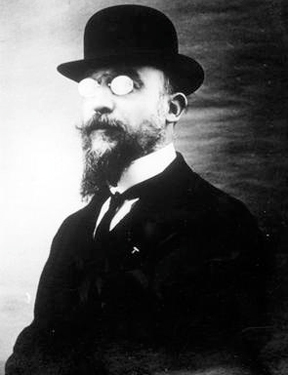 (http://picturepush.com/public/13870613)
(http://picturepush.com/public/13870613)chapeau, mec !
Remembered most vividly for his 1958 "space opera" Aniara, composer and educator Karl-Birger Blomdahl
(1916-1968) was a leader in the Monday Group, a gathering of Swedish composers who met regularly to discuss
contemporary music. Well trained, Blomdahl moved from a style rooted in traditional Scandinavian music to a
Hindemith-derived contemporary approach to composition, encompassing extended melismas, choral motives,
electronic music, and even elements of jazz.
During the 1940s, Blomdahl’s participation in and eventual leadership of the Monday Group fed his growing
interest in contemporary music. Meeting in Blomdahl’s apartment, the members — composers, musicologists,
and players — were intrigued by Paul Hindemith’s compositional theories as outlined in his Unterweisung im
Tonsatz. Aside from compositional techniques, topics of interest ranged from instructional methodologies
to the popular media and its role in the country’s musical life. The 1950s brought in new directions to Blomdahl’s
music, one of them encircling mythology. With choreographer Birgit ???kesson and poet Erik Lindegren, Blomdahl
composed two striking ballets, Sisyphos and Minotauros, in 1954 and 1958, respectively. At the same time,
he was writing Aniara, an opera set in space and described by the composer as "a revue of man in time and
space." Like the aforementioned ballets, Aniara represents the first phase of Blomdahl’s mature period.
Blomdahl was director of music for Swedish Radio at the time of his death.
While his Symphony No.2 is testament to Blomdahl’s extensive studies in Baroque music during his sojourn
at the Royal Swedish Academy of Music, the third, subtitled "Facettes" – is a work in one subdivided movement in
twelve-tone variation form; it dates from 1950 and is considered a major contribution to the repertoire.
Music Composed by Karl-Birger Blomdahl
Played by the Swedish Radio Symphony Orchestra
Conducted by Leif Segerstam
"This is really marvelous music. Karl-Birger Blomdahl (1916-1968) was at the forefront of Swedish
modernism in his time, but there is nothing forbidding about this music. The third symphony (1950)
has actually secured for itself a prominent place in Swedish music history and is performed (and even
recorded) with some regularity. It is indeed a masterpiece, a fast-moving, energetic, intense and
momentous twelve-tone variation work, utterly compelling, inventive and imaginative, both with
respect to form and with respect to its remarkable textures. It is a massive work of swirling colors
and churning energy, though with an appositely lyrical (though unsettling) slow section giving way
to a cumulatively powerful final section that ends in bleak serenity. Cast in one single arch, it is also
an exceptionally focused, tautly argued work – and despite its modern language it remains immediately
attractive.
Neither of the other two works quite reach the levels of the third, but they are still very fine works.
The first symphony (1943) is less original, displaying indebtedness to Honegger above all. Despite
some clumsy transitions, it works well overall and creates something of an impact. The second symphony
(1947) is somewhat more concentrated – not as original as the third, and with a somewhat meandering
first movement, but with an overall surging energy (and a deeply impressive slow movement) that
makes for a great listening experience.
The Swedish Radio Symphony Orchestra under Leif Segerstam provides utterly committed performances,
as strong on energy and momentum as they are on capturing the details and subtleties of the works.
The recording is well-defined, well-balanced, clear and powerful as well. In short, a magnificent release
that deserves all possible success."
Amazon Reviewer
Source: BIS CD (my rip!)
Format: mp3, 320k/s (CBR), DDD Stereo
File Size: 186 MB (incl. cover & booklet)
Download Link – https://mega.co.nz/#!BwdCVT4K!Eou6kFrFVH0g5sRElmEEh12XtW9UNe5nSLOMnrk M4NE
Enjoy! Don’t share! Buy the original! 🙂
Like West Side Story and many of his other works, Leonard Bernstein’s Divertimento is made
up of an exuberant array of styles, from various types of American popular music to symphonic repertoire
from different historical periods. In this instance these references work as a series of reminiscences and
tributes, relating to the piece’s composition for the centenary of the Boston Symphony Orchestra.
For the most part the work is lighthearted, and the composer’s sense of fun is typified by his instruction
that the piccolo, and later the brass section, stand up for their solos in the finale, as if they were playing
in a brass band concert. This rousing conclusion to the work, "The BSO
Forever" is a pastiche of a march, the "Radetzky", which was played regularly at the Boston Pops
concerts which Bernstein attended. It follows directly on from the more somber "In Memoriam," where
the composer remembers Boston players and conductors who have passed away, with a short passage
for three flutes where the instruments play the same melodies at staggered intervals of time (a canon).
Like the march, the "Samba" and "Turkey Trot" movements are in the style and mood of the Pops
concerts, and the "Blues" movement draws on the popular music style which Bernstein had heard when
visiting Boston nightclubs in his youth. The "Mazurka" and "Waltz," on the other hand, refer to
Beethoven and Tchaikovsky, respectively; the "Mazurka" incorporates a quotation of the oboe cadenza
of the first movement of Beethoven’s Fifth Symphony, while the "Waltz"–often singled out as a
particularly engaging part of this piece–is in the irregular time of 7/8, and is an homage to
Tchaikovsky, particularly the 5/4 waltz of his Sixth Symphony. The opening movement, "Sennets
and Tuckets," begins with celebratory fanfares, and its title is derived from a Shakespearian stage
direction for that type of flourish (Bernstein had originally planned to use the first movement material
as the basis for the whole work, but this scheme gave way in the face of the huge range of ideas
which later occurred to him).
[B]MASS (formally, "MASS: A Theatre Piece for Singers, Players, and Dancers") is a musical
theatre work with a text by Bernstein and additional lyrics by Stephen Schwartz. It was commissioned by
Jacqueline Kennedy on occasion of the opening of the John F. Kennedy Center for the Performing Arts
in Washington, D.C.. The work is based on the Tridentine Mass of the Roman Catholic Church. Bernstein
later extracted three purely orchestral movements (Three Meditations) from the work.
Music Composed and Conducted by Leonard Bernstein
Played by the Israel Philharmonic Orchestra
"The Israel Philharmonic Orchestra (abbreviation IPO; Hebrew: התזמורת הפילהרמונית הישראלית,
ha-Tizmoret ha-Filharmonit ha-Yisre’elit) is the leading symphony orchestra in Israel.
The then Palestine Symphony Orchestra was founded by violinist Bronisław Huberman in 1936,
at a time when many Jewish musicians were being fired from European orchestras. Its inaugural
concert took place in Tel Aviv on December 26, 1936, and was conducted by Arturo Toscanini.
Its director in the 1939-1945 period was Leo Kestenberg – like many of its members, a German
Jew forced out by the the Nazi rise to power. During the Second World War the orchestra
performed 140 times before Allied soldiers, including an 1942 performance for soldiers of the
Jewish Brigade at El Alamein. At the end of the war it performed in recently-liberated Belgium.
In 1958, the IPO was awarded the Israel Prize, in music, being the first year in which the Prize
was awarded to an organization.
The IPO enjoys frequent international tours, and has performed under some of the world’s
greatest conductors, including Leonard Bernstein and Zubin Mehta, both of whom are prominent
in the orchestra’s history. Bernstein maintained close ties with the orchestra from 1947, and
in 1988, the IPO bestowed on him the title of Laureate Conductor, which he retained until his
death in 1990. Mehta has served as the IPO’s Music Advisor since 1968. The IPO did not have
a formal music director, but instead "music advisors", until 1977, when Mehta was appointed
the IPO’s first Music Director. In 1981, his title was elevated to Music Director for Life.
Kurt Masur is the IPO’s Honorary Guest Conductor, a title granted to him in 1992. Gianandrea
Noseda is Principal Guest Conductor, a role previously occupied by Yoel Levi."
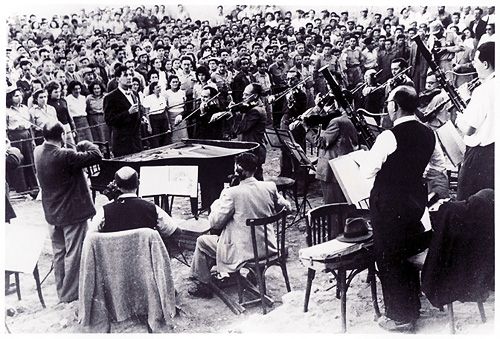
Bernstein conducts the IPO in front of 5,000 soldiers.
Source: DGG CD (my rip!)
Format: mp3, 320k/s (CBR), DDD Stereo
File Size: 125 MB
Download Link – https://mega.co.nz/#!gFYGRYgL!QIyf1QFa8PDeAgBvz5HEeVPvEEMkdV-Wgoop6ab-NnM
Enjoy! Don’t share! Buy the original! 🙂
Born in Barcelona on 22 September 1933, Leonardo Balada graduated from the Conservatorio del
Liceu of that city and The Juilliard School in 1960. He studied composition with Vincent Persichetti
and Aaron Copland, and conducting with Igor Markevitch. Since 1970 he has been teaching at
Carnegie Mellon University in Pittsburgh, Pennsylvania, where he is University Professor of Composition.
Balada has been commissioned by many outstanding organizations in the United States and Europe,
including the Aspen Festival, the San Diego Opera, Teatro Real of Madrid, the Pittsburgh, Cincinnati and
Hartford Symphonies, and National Endowment for the Arts. He has composed works for artists such
as Alicia de Larrocha, Lorin Maazel, Mariss Jansons, the American Brass Quintet, the Mir??? String Quartet,
Andr???s Segovia, Narciso Yepes, Lucero Tena, ???ngel Romero, Eliot Fisk, Andr???s Cardenes and has
collaborated with artists and writers including Salvador Dal??? and Nobel Prize winner Camilo Jos??? Cela.
Balada???s extensive list of works includes, in addition to chamber and symphonic compositions,
cantatas, two chamber operas and four full length ones: Zapata, Christopher Columbus,
its sequel Death of Columbus and Faustbal. Christopher Columbus had its premi???re in Barcelona
in 1989 with Jos??? Carreras and Montserrat Caball??? singing the leading r???les and attracted international
attention. The unique ???avant-garde??? techniques, dramatically as well as rhythmically imposing, which
Balada developed during the 1960s, set works such as Guernica (which was inspired by Picasso???s
mural and the composer???s own experiences of the Spanish Civil War) apart from composers of the time.
Later, in the seventies, he was credited as a pioneer in blending the modern with folkloric ideas and
mixing the new with the old in works such as Symphony No.4 and Homage to
Casals and Sarasate.
Music Composed by Leonardo Balada
Played by the Barcelona Symphony and Catalonia National Orchestra
Conducted by Salvador Mas Conde
"With its series of orchestral music of the Catalan composer Leonardo Balada (b. 1933)
Naxos demonstrates that this is a composer of importance. His mature style uniquely weaves
traditional melodic threads through material borne of post-12-tone European modernism.
Because some of the music functions more or less as we subconsciously expect, our ear
usually is able to find solid reference points. The results are sometimes hilarious, sometimes
frightening, but nearly always intriguing. The performances are also rendered with fluency
and wit by conductor Mas Conde; this orchestra plays very well and sounds like a superior,
well trained regional symphony.
Among the discs in the Naxos series, this one provides the best overview of the composer???s
career. Balada remained a conservative composer against his wishes (he was a ???progressive???
in most other respects) because he never could find anything other than intellectual
sterility in the dominant 12-tone system. After composers such as Ligeti and Penderecki
found ways to be avant-garde without adopting the Schoenberg-Webern system, Balada,
in a virtually overnight style-change, wrote two pieces that applied these new techniques,
including a musical rendering of that paragon of progressive protest art, Picasso???s Guernica.
Here the composer portrays the fears he experienced as a young boy in Barcelona under
Fascist bombardment. The work uses a sonic palette built on blocks of sound, effectively
capturing the starkness of Picasso???s grey-and-black masterpiece.
After Guernica, the program moves on to a pair of works representing Balada???s next style
change, Homage to Sarasate and Homage to Casals. It was here that Balada began
using tonal melodies against an attractive harmonic accompaniment, with Sarasate???s
Spanish tunes in the first piece and Casals??? concert version of the Catalan sardana in the
second. Although the ???Lausanne??? Symphony comes across as a rather flat, unsuccessful
reworking of his then-current orchestral technique, Images for Orchestra, from Balada???s
opera Zapata, returns to the composer???s best form, occasionally throwing Mexican
tunes (including ???La Cucaracha???) into an almost Ivesian homage to the revolutionary
leader. In all, this is a strongly recommendable disc???and not just for the usual fans of
musical modernism."
Classics Today http://i1084.photobucket.com/albums/j415/wimpel69/p9s9_zps84ded66b.gif
Source: Naxos CD (my rip!)
Format: mp3, 320k/s (CBR), DDD Stereo
File Size: 166 MB (incl. cover & booklet)
Download Link – https://mega.co.nz/#!9NZ3UDTb!YEmGZSL2aMsqPWWlcyKfbzRW705Sho4zR3ZnZSj vsgY
Enjoy! Don’t share! Buy the original! 🙂
This is my final upload for at least a week.
Big thanks for yet another stunner!
🙂
thank you so much again for all the great music
please help with one of your uploads if possible
Merikanto (track 6) – sadly this track has some annoying cd clipping and jumping just as it gets going! 🙁
anyway of cleaning it up?
thank you again
Lovro von Matacic (1899-1985), one of the greatest conductors of the 20th century,
started his career in 1919 as conductor of orchestras in Osijek, Novi Sad, Ljubljana, Belgrade,
Riga, and in Zagreb in 1932. From 1942-1945 he was conductor of the Vienna Opera. After 1945
he was imprisoned by the Yugoslav communist regime, and together with Croatian painter
Kristian Krekovic sentenced to confiscation of all movable and immovable property. In 1950’s
he became organizer of Festivals in Dubrovnik and Split. In 1956 Matacic moved to Germany to
conduct East Berlin Opera and the famous Dresden Staatskapelle, then conducted at Bayreuth
in 1959, and from 1961 to 1966 was Gereralmuikdirektor in Frankfurt. From 1970 to 1980 he
was conductor and artistic director of the Zagreb Philharmonic Orchestra, and almost
simultaneously from 1973 to 1979 had the same role in the Monte Carlo Orchestra.
The Symphony of Confrontations is purely orchestral, cast in four movements, and is of
Mahlerian dimensions – although the musical style is more evocative of Bart???k, Shostakovich
and Prokofiev. Matacic composed and recorded the work towards the end of his long career.
He is showing off his compositional chops in a huge, often furious hour-long symphony. As its
name suggests, there’s a lot of expressionist tension in the piece, though it’s structured quite
traditionally — picture a Shostakovich symphony with the dissonance turned up several notches.
He rarely uses tonality, though sometimes there’s a modal sound that reminds us of Bloch.
But it’s not gentle enough to ever be confused for a Bloch work.
Music Composed and Conducted by Lovro von Matacic
Played by the NHK Symphony Orchesta
Source: Denon CD (my rip!)
Format: mp3, 320k/s (CBR), DDD Stereo
File Size: 147 MB (incl. covers & booklet)
Download Link – https://mega.co.nz/#!YAIkkQ7Y!fVv-QAvyuSXIQeq29XhSRVW6OSpTmWYkgxm3OcL7xsQ
Enjoy! Don’t share! Buy the original! 🙂
Excuse me Wimpel, there is a problem with pdf booklet inside….
can you repost only this please?
No.490
Lu???s de Freitas Branco was born in Lisbon in 1890 where he lived most of the time
until his death in 1955. He was a preeminent figure in Portuguese music of the first half of the
twentieth century, and his four symphonies constitute the essence as well as the culmination
of his musical development. Born into an aristocratic family with ties to the royal family for
many centuries, Lu???s de Freitas Branco enjoyed a highly sophisticated education, which included
studies both in Berlin and then in Paris, where he worked with composers including Engelbert
Humperdinck and D???sir??? P???que.
As far as Freitas Branco???s legacy as an orchestral composer is concerned, it must be pointed
out that when he entered the Portuguese music scene at the beginning of the century, no
permanent orchestra existed in Lisbon apart from that of the S???o Carlos Royal Opera, which
did not perform symphonies but played operatic repertoire, mainly Italian, and sometimes
German and French. Indeed, after Jo???o Domingos Bomtempo (1771???1842), who composed
various symphonies, only Vianna da Motta (1868???1948) wrote a symphony, published in Rio
de Janeiro in 1899. This said, it means that when Freitas Branco composed his first symphony
in 1924, he was profoundly aware that he was treading on new territory in Portugal.
His musical development began with the influence of French late Romantic composers and
some of the Impressionists such as Debussy. Yet, aware of the importance of introducing
into Portuguese music large scale works such as symphonies for large orchestra, he clearly
opted for a neo-classical style of his own, based on thematic development as he found it
in the music of the so-called cyclic school of the Belgian composer C???sar Franck.
Symphony No.4, composed between 1944 and 1952, and scored for four flutes, two
of them doubling piccolo, two oboes, cor anglais, two clarinets, bass clarinet, three bassoons,
four horns, three trumpets, three trombones, tuba, contrabass tuba, timpani, percussion and
strings, represents the culmination of his symphonic vision of monumentality in music, a kind
of neo-classic late Romantic stylistic approach, following the fourmovement tradition to which
he had remained faithful since his Second Symphony, composed in the 1920s. Dedicated to his
disciple Joly Braga Santos, the Fourth Symphony is based, like the Second, on Gregorian
chant. Used as a means to unify much of the thematic material which appears in the work, it
also establishes, right from the start, a mood which prepares the listener for the chorale-like
passages which constitute big climaxes in the first and last movements. Suffice it to say, there
is no question that this work is the most creative, appealing, and accomplished of Freitas
Branco???s four symphonies.
Vathek, the full subtitle of which is Symphonic Poem in the form of variations on an
Oriental theme, is a most important, revolutionary work which, although composed in 1913,
was not performed until 1950, and even then without its Third Variation, which was played for
the first time in my first concert in Lisbon, in 1961. Those who are familiar with the kind of
music which was produced in Portugal during the first decades of the twentieth century, can
well understand that a work such as Vathek would have met with utter repulsion. And
why, after all? Because of the polytonal introductory brass fanfare? Because of the twelve-
tone chords (built of superimposed fourths in the strings) in the middle and at the end of the
Prologue? These dissonances, never heard before, and never heard again until the avant-
garde of the 1960s, are yet minor details compared with the Third Variation, which offered
something unheard of in all European music in 1913, when it was written. It is a fugato in
59 ???voices???, starting with eight solo cellos, followed by eight violas, sixteen second violins,
sixteen first violins and, finally a variety of solo woodwind, leading to a slow, majestic,
restatement of the main motif in the lower brass, interrupted by two bars of silence. This
sudden silence is followed by an outburst of ???laughter??? from the whole orchestra, as if the
composer expressed his ???amusement??? about the utter disbelief of the audience.
Music Composed by Luis de Freitas Branco
Played by the RT??? National Symphony Orchestra of Ireland
Conducted by ???lvaro Cassuto
"Lu???s de Freitas Branco???s symphonies, with their somewhat Franckian cyclical forms
(and sometimes melodies), are more conservative than his impressionist, cutting-edge orchestral
works from the turn of the 20th century. Vathek is one such, an amazing, luscious, exotic
tone poem in the form of a theme and variations. Unperformed until 1950, just five years
before the death of its composer, it is a masterpiece, and one of the most remarkable works
of its era (there???s a variation written with something like 59 string parts, almost an anticipation
of Messiaen or Ligeti).
In the Fourth Symphony (1944-52) Branco recaptures his youthful fire. The work mixes the
modal melodies of Gregorian chant with tangy dissonances and supple, Latin rhythms. The
result recalls the Hindemith of, say, Nobilissima Visione, though the scoring is quite different
and the handling of form more traditional (save in the multi-sectional finale). Certainly this
is the finest of the composer???s four symphonies, and a wonderful work by any measure."
Classics Today http://i1084.photobucket.com/albums/j415/wimpel69/ct_disc-of-the-month_zpsc2d3048b.gif
Source: Naxos CD (my rip!)
Format: mp3, 320k/s (CBR), DDD Stereo
File Size: 189 MB (incl. cover & booklet)
Download Link – https://mega.co.nz/#!hYpDGYzT!BM0Vn3fGyX1KgqYJItCQd1_M14Y67iLjf_JLO3G oyVQ
Enjoy! Don’t share! Buy the original! 🙂
Flutist Carol Wincenc has known Lukas Foss since her youth in the 1960s, when he was music
director of the Buffalo Philharmonic. When she asked him to write a flute concerto for her in 1985,
he was faced with the problem confronted by every composer in this genre: how to create an orchestral
texture that would not overwhelm the solo instrument. Recalling that the flute ???was a favorite instrument
in the Renaissance and Baroque eras… [and] in ancient Greece, where the Olympic Games included
flute playing,??? he sought the sound he wanted in early music. The work, says Foss, is ???an homage to
something I love, a handshake across the centuries.??? He completed the Renaissance Concerto in 1986.
Salomone Rossi, who lived in Mantua from about 1570 to about 1630, called himself ???L’Ebreo,??? and
set a number of Hebrew texts to music in a collection punningly titled The Songs of Solomon. His
madrigals resemble those of his contemporary Monteverdi, but some of his orchestral works point
clearly to the trio-sonata form of Baroque chamber music. Lukas Foss’s Salomon Rossi Suite,
composed in 1975 and dedicated to the Jerusalem Symphony Orchestra, follows the example of
Stravinsky’s Monumentum pro Gesualdo di Venosa ad CD annum in recomposing a Renaissance
composer’s music for modern instruments without romanticizing it.
With Orpheus, a work composed in 1972 and incorporating elements of pantomime, Lukas Foss
sought to evoke that feeling of an unfamiliar time and place, through the use of unusual staging and
unconventional instrumental timbres. The result was not a benign trance or a Disney-like pastorale,
but a celebration of the awesome power of mousikee, the calling of the muses, a synthesis of Apolonian
discipline with the savage power of the Dionysian rite. In 1983 Foss added an extended violin duet
to the piece, creating a new work, Orpheus and Euridice, dedicated to Yehudi Menuhin and
Edna Michell (premiered in Gstaad and Lucerne, Switzerland, in 1985). The effect of the new material
is to humanize the work, to balance its alienated, otherworldly character with moments of warm-blooded
passion, and to heighten the sense of loss at the end.
Music Composed and Conducted by Lukas Foss
Played by the Brooklyn Philharmonic Orchestra
With Carol Wincenz (flute)
And Yehudi Menuhin & Edna Michell (violins)
"The real gem on this disc is the Salomon Rossi Suite. This relatively unknown Renaissance
composer is given a fresh interpretation through Lukas Foss’ arrangement. The movement for harp
and timpani is especially attractive, but the entire Suite shows how a contemporary vision of older
music can be a truly engaging listening experience."
Amazon Reviewer
Source: New World CD (my rip!)
Format: mp3, 320k/s (CBR), DDD Stereo
File Size: 117 MB (incl. liner notes)
Download Link – https://mega.co.nz/#!xMxnXJzb!BL0HY0440qKeqZcaa3wOyj4_JMYMSCya-i-UnQgrEPQ
Enjoy! Don’t share! Buy the original! 🙂
The Coronation of Queen Elizabeth II in June 1953 was celebrated by a number
of high-profile artistic events in London, several of them mounted at the Royal Opera
House, Covent Garden. Malcolm Arnold???s first ballet score, Homage to the Queen,
was commissioned specifically to mark the occasion, and if the composer felt honoured
at the prestigious invitation he may well have been blissfully unaware of the in-house
rivalries that had resulted in what was in fact a last-minute initiative.
The choreography was by Frederick Ashton and the production was designed by
the baroque-inspired Oliver Messel, at whose behest the original plan to present four tableaux
devoted to famous Queens of England was dropped in favour of a less challenging scheme
involving the Four Elements, each of which was to have its own Queen and entourage.
The initial success of Homage to the Queen quickly led to another ballet commission for
Arnold. In 1954 he composed Rinaldo and Armida, a one-act ???dance-drama???, and guest-
conducted the first performance himself at the Royal Opera House on 6 January 1955,
as part of a double bill completed by a new ballet based on Britten???s Young Person???s
Guide to the Orchestra. Rinaldo and Armida was based on an episode from Torquato Tasso???s poem
Ierusalemme liberata (1581), in which the deadly enchantress Armida, whose lovers
meet their doom in her garden, meets her own end when she falls in love with one of
them: the mortal warrior Rinaldo.
Music Composed by Malcolm Arnold
Played by the Aarhus Academy of Music Symphony Orchestra
With Erik Spang-Hanssen (organ)
Conducted by Douglas Bostock
"Arnold’s charismatic music receives an interesting survey here with this 80th birthday CD containing
some of his rare works that are receiving premi???re recordings. Of special interest in this Jubilee year
is the recording of the ‘Homage to the Queen’ Suite which receives its world premi???re. The six
movements are informed with particular gaiety and charm whilst the typical Arnold treatment
makes the music turn into a glorious pageant like exposition.
The short Organ Concerto is similar in vein to the Trumpet and Tuba works and has Ulrik Spang-
Hanson catching on for dear life throughout the highly charged parts. I didn’t care too much for
‘Rinaldo and Armida’, a ballet very much in the shape of Lambert’s ‘Pomona’, perhaps a genre
that does not appeal too much to this writer. The ‘Little Suite #2’ is also very welcome; this is
Arnold at his most congenial.
The Danish orchestra are persuasive advocates of the music and for those who enjoy out-of-
the-way music this disc is definitely a fine acquisition."
Classical.Net
Source: Classico CD (my rip!)
Format: mp3, 320k/s (CBR), DDD Stereo
File Size: 150 MB
Download Link – https://mega.co.nz/#!URZGHL4D!VHA8T0Ma6kc3Xu-axok_1VOnEj1dzChNKeMKHoCMSug
Enjoy! Don’t share! Buy the original! 🙂
Lukas Foss: Renaissance Concerto, Salomon Rossi Suite, Orpheus and Euridice
Thanks friend Wimpel69 for this disc it’s great. Do you have another disc with works of Foss, specifically the Capriccio for Cello and Piano???? Thanks for your attention.
I’ve read about Joel McNeely stealing from Walton’s the Quest for The Destruction of Xizor’s Palace (https://www.youtube.com/watch?v=x_deMfDs9jY) from Star Wars: Shadows of the Empire. I better get to know the origin. Thanks for sharing the complete ballet, wimpel69!
I got some other Foss but not this work (or other chamber music).
No.493
Malcolm Forsyth, honoured as Canadian Composer of the Year in 1989, has earned international
recognition as one of Canada???s leading composers. Born in 1936 in Pietermaritzburg, South Africa, Forsyth
majored in trombone, conducting and composition at the University of Cape Town and played trombone
8 years with the Cape Town Symphony Orchestra (CTSO) while obtaining his Master???s and subsequently
Doctorate degrees. His career as a composer was launched when the CTSO performed Overture Erewhon
(1962), and its success led to an invitation to write the Jubilee Overture for the orchestra???s 50th anniversary
in 1964. In 1968 Forsyth emigrated to Canada and settled in Edmonton where he joined the Edmonton
Symphony Orchestra. Forsyth died in 2011.
Atayoskewin is one of Forsyth???s most frequently-played compositions, and for a good reason: it
is a brilliantly scored, imaginative, highly enjoyable evocation of three aspects of the Albertan northland,
music that could only have been written by a Canadian. The composer explains what he attempted to
portray in Atayoskewin: ???The inspiration behind this title is something of a mood, a feeling that I
had when I made my first-ever trip to northern Alberta during the winter. It was very cold, and I saw
this barren land where the tar sands are being developed. It???s a very forbidding land, but it has a kind
of majesty which is unmistakable." Each of the three movements conjures up a mood or image.
Harry Freedman (b Henryk Frydmann). Composer, english hornist, educator, b Lodz, Poland, 5 Apr
1922, naturalized Canadian 1932, d Toronto 16 Sep 2005. Raised from the age of three in Medicine Hat,
Alta, where his father was engaged in the fur trade, Freedman moved with his parents to Winnipeg in 1931.
He enrolled at the Winnipeg School of Art at 13 to train as a painter. Attracted also to big band jazz, he
began clarinet lessons at 18. His teacher – Arthur Hart, the leading local orchestral clarinetist, later
principal of the Winnipeg Symphony Orchestra – introduced him to symphonic music.
After serving in the RCAF in World War II Freedman settled in Toronto, where he studied
composition 1945-51 with John Weinzweig at the Royal Conservatory of Music and oboe with Perry
Bauman. He also took summer classes with Messiaen and Copland at Tanglewood. He joined the
Toronto Symphony Orchestra in 1946 as english horn and remained with the orchestra for 25 years,
serving during his last year as the orchestra’s first composer-in-residence.
The Messiaen classes clearly left their mark on Freedman’s ballet Oiseaux ???xotiques (the French composer
had a lifelong obsession with birds himself). Intricate contrapuntal interplay and colorful orchestration are
evident in nearly all of the dances.
Music by Malcolm Forsyth and Harry Freedman
Played by the CBC Edmonton Symphony Orchestra
Conducted by Uri Mayer
Source: CBC Records (my rip!)
Format: mp3, 320k/s (CBR), DDD Stereo
File Size: 149 MB (incl. cover & composer bios)
Download Link – https://mega.co.nz/#!sF53lT4J!GL3mpBnTA_B4wfteCF8Lf36L6fF8X9huf1j2LSn RUrU
Enjoy! Don’t share! Buy the original! 🙂
"Written for Evelyn Glennie, Aurolucent Circles is a concerto conceived to display the wonderful array of
delicate and mysterious percussion sounds it is possible for a skilled player to produce, as well as the styles of
more traditional drumming. The aim was to make a concerto that would be as musically sophisticated as the
ones usually written for the violin or piano. In the delicate and transparent sections, the soloist is often accompanied
only by one of two concertino groups. Inspired by the poetic physical motion of Evelyn Glennie when she performs,
it became an important aim in this work that there be motion in the sound as well.
Mandala was commissioned by the Cleveland Chamber Symphony. It was written during a residency at
the MacDowell Colony in New Hampshire. While I was there, Tibetan monks spent ten days in the adjoining town
of Peterborough creating an intricate sand painting of a mandala. After about a week, they destroyed the mandala
in a ceremony of explanation, chanting and horn blowing. At some point, I realised that the experience of the
mandala was interwoven into the fabric of this piece. The music is very much constructed in circles that spiral
inward. In addition, because the brass are positioned in the auditorium, the music travels in circles around the
performance space.
In Pulse, rhythmic pulses of differing values exist over a steady grand pulse that is the same for all. The
spirit motive emerges, mysterious, rustling, and whispery, flowing through with melody, and in the end becomes
infused and strengthened by connections of differing values and pulses.
The tone poem Remembrances is an elegy and a tribute to Robert Stewart who was a musician, composer,
sailor, and loved one. Beginning with an expression of grief and sorrow, the music evolves into a musical portrait,
full of warm memories, love and admiration, and images of sailing. Typical of elegies and tone poems such as
Death and Transfiguration by Richard Strauss, it ends in a spirit of consolation and hope.
James Gleick describes the alarming pace and frenetic life-style of the twenty-first century in his book, Faster.
One of his many examples is the Master Clock, which is overseen by the Directorate of Time, an agency of the
United States Military. It constantly consults fifty other atomic clocks to compute time within the millisecond so
that computers and digital devices around the world can alter their conventional time to ???exact??? time. In SIZZLE,
the orchestra could be said to represent this part of twentyfirst-century life, fast-paced, energized, and filled with
emphatic and mesmerising rhythms."
Margaret Brouwer
Music Composed by Margaret Brouwer
Played by the Royal Liverpool Philharmonic Orchestra
With Evelyn Glennie (percussion)
Conducted by Gerard Schwarz
"The American composer, who was in the house to receive the rapturous applause along with Glennie,
has written a marvelous display piece that takes into acount the astonishing virtuosity of Glennie and the
need to be careful not to overwhelm her with the collective sound of nearly 100 musicians.
Brouwer’s music is effective and solid, often rather atmospheric, and gives the percussion soloist many
opportunities. The vigorous phrases of strong fortes and excited passages are deftly joined with their
opposite numbers. There is much to keep one interested, especially with Glennie as the chief proponent.
The duets between soloist and other orchestral instruments- flutes, trombone, clarinet- were cleverly
conceived and integrated into the whole.
…So subtle, so bold, so precisely timed and framed, her bravura playing of the new "Aurolucent Circles"
by Margaret Brouwer drew a fascinated Benaroya Hall audience to its feet.
…The delicate and lovely effects at the beginning of the first and second movements were particularly
well framed, in music that sounded appropriately other-worldly with harps and eerie string glissandos… "
The Seattle Times
Source: Naxos CD (my rip!)
Format: mp3, 320k/s (CBR), DDD Stereo
File Size: 151 MB (incl. cover & booklet)
Download Link – https://mega.co.nz/#!ZEpAUQzR!b1x7CEpLUlBfk3ouyHJVikQTv-QqASuJQyWH1bQcIsE
Enjoy! Don’t share! Buy the original! 🙂
🙂
Mario Pilati was born in Naples in 1903 and was sent by his parents to a commercial school,
where he qualified as a bookkeeper. He had studied Latin and Greek on his own, however, and had
also started composing music. This allowed him at the age of fifteen to enter the composition class
of the Conservatorio di Musica San Pietro a Majella, after a short period of study at the Naples Liceo
Musicale. His teacher Antonio Savasta recognised Pilati???s natural talent, the cause of envy in his fellow
students, who frequently teased him, calling him a revolutionary. His outstanding gifts also drew
the attention of the director of the Conservatory, Francesco Cilea, who did much to encourage him.
At the age of nineteen Pilati was awarded his composer???s diploma summa cum laude and was shortly
afterwards appointed as a teacher in the composition class of the Conservatory of Cagliari. In 1925,
on the advice of Pizzetti, he decided to move to Milan, a musical capital that would eventually suit
better his taste and ambitions, but not without enormous initial difficulties. In 1933 he was
nominated a professor in composition at the Conservatory of Palermo and, in 1938, again in Naples.
He held this final position only a few months: the fatal illness, which had been diagnosed two years
earlier, had reached its final stage. He succumbed to it on 10 December, dying at the age of 35.
Pilati was a prolific composer of chamber, vocal and orchestral music. Like many of his
contemporaries, he was drawn to the instrumental music of the past, especially that of his own
country. An example of this is the Suite for Strings and Piano of 1925, which is neo-classical
in style. His other love, that of folk music, is also evident in later works, such as the Concerto
for Orchestra, with its ebullient finale ???alla tirolese???. The attractive lullaby Alla culla comes
from the very end of his short life.
Music Composed by Mario Pilati
Played by the Slovak Radio Symphony Orchestra
With Tom???s Nemec (piano)
Conducted by Adriano
"Born in 1903 and active in the 1920s and 1930s before his death at age 35, Italian composer
Mario Pilati has been largely forgotten. His resurrection here is due to the championing of
the single-named Swiss conductor Adriano, who also wrote the enthusiastic booklet notes.
Pilati’s style shows the influence of Respighi and of the more contemporary neo-classic
movement, which converge in his expansive treatment of antique dance forms like the
minuet and the sarabande. Adriano sets great store by the opening Concerto for orchestra
in C major, one of the earlier works to use that designation. Pilati’s inspiration may have
been Ernest Bloch’s two works of the early ’20s that use the earlier concerto grosso
designation, and his incorporation of the piano into the basic every-instrument-is-a-soloist
configuration of the concerto grosso has several surprises, and the final Rond??? alla
tirolese is filled with colorful folk rhythms. But the work lacks the sense of humor that
is the most distinctive thing in the music by Pilati heard on this disc. The small dances
of the Three Pieces for Orchestra and the Suite for Strings and Piano display Pilati’s talent
as an orchestrator to better advantage, quickly veering off from the basic dance strains
into fantasies on the rhythm involved, punctuated by unexpected texture shifts. The
final By the Cradle, composed shortly before Pilati’s death in 1938, is a simple tonal
work and certainly deserves wider exposure. The prolific musicians of the Slovak Radio
Symphony Orchestra rose to new heights for conductor Adriano in this recording, made
in Bratislava in 2000 and 2001, but the three shorter works on the program could
probably stand up to a performance by one of the true virtuoso chamber orchestras
of the day, and probably deserve such a performance."
All Music
Source: Naxos CD (my rip!)
Format: mp3, 320k/s (CBR), DDD Stereo
File Size: 143 MB (incl. cover & booklet)
Download Link – https://mega.co.nz/#!AdwxCCLZ!S0uZEWH-Ep9LbptWM4DUSExwjZ0MOrrXOE21gFB1b_A
Enjoy! Don’t share! Buy the original! 🙂
———- Post added at 12:46 PM ———- Previous post was at 11:48 AM ———-
No.496
Matthew Taylor is an English composer and conductor. Taylor was born in London in 1964.
He attended the Junior Royal Academy of Music. He studeid composition with Robin Holloway at
Queens’ College, Cambridge University and later at Guildhall School of Music and Drama and at
the Royal Academy of Music. He later continued his composition training with Robert Simpson
and Sir Malcolm Arnold.[2] As a conductor he trained with Robin Page, Vilem Tausky and with
Leonard Bernstein at the Schleswig-Holstein Musik festival. Taylor’s compositions have been
performed by the BBC Symphony Orchestra, BBC Scottish Symphony Orchestra, John McCabe,
Martyn Brabbins, George Hurst, Richard Watkins and Raphael Wallfisch. He has been Artistic
Director of the Malvern Festival, Composer in Residence at the Blackheath Halls, Associate
Composer of ensemble Sound Collective, Artistic Director of the Royal Tunbridge Wells
International Music Festival andArtistic Director of the St Petersburg British Music Festival.
These are premiere recordings of Taylor’s Symphony No.1 ("Sinfonia Brevis”) and No.3, as
well as of the Horn Concerto written for (and played here by) Richard Watkins.
Taylor is a fairly young composer still, his first symphonic outing performed
in 1985(!) – and the good news is, the music isn’t nearly as regressive as the opus numbers
and the fact that the Sinfonia Brevis was inspired by Haydn’s "Sturm und Drang" symphonies
– as well as the employment of the Royal Ballet Sinfonia, mostly used for light fare – seem
to indicate. Taylor’s musical language is very obviously contemporary too, if not of the
most radical kind. There’s a lot of color and contrast in the music, if not always cohesion.
If you like, say, Tippet’s symphonies or Simpson’s, you should be fine.
Music Composed and Conducted by Matthew Taylor
Played by the Royal Ballet Sinfonia
With Richard Watkins (horn)
"Music of substance and integrity which will durably reward the patient listener.
Toccata Classics’ anthology (2/06) of three chamber offerings by Matthew Taylor
found favour with both myself and Richard Whitehouse, and I’m able to report that
this enterprising new Dutton anthology featuring three orchestral works leaves a
similarly positive impression.
Born in London in 1964, Taylor was only 21 when he completed his First Symphony,
a 16-minute, single-movement canvas of uncommon skill, purposefulness and fluency
for one so tender in years. Laid out for classical forces comprising just two oboes,
two horns and strings (an in-depth study of Haydn’s Sturm und Drang symphonies
provided the initial stimulus), it’s scored with tasteful restraint, as are the 1999
Concerto for horn and strings (of which dedicatee Richard Watkins gives a superbly
agile account) and Third Symphony (2003-05).
Both these rewarding essays are cast in two parts and exhibit readily identifiable
points of contact with Nielsen and Simpson. Taylor writes with considerable inventive
flair, economy of thought and wit. Above all, his is a resourceful and personable voice
that never fails to communicate; anyone on the hunt for new music that draws its
wellsprings of inspiration from the great symphonic tradition should lose no
time in making its acquaintance.
The composer (a very useful conductor in his own right) secures a commendably
fresh-faced set of performances, and production standards are all that we have come
to expect from the established Keener/Eadon partnership. I look forward to hearing
more of this accomplished figure’s output on disc."
Source: Dutton Epoch CD (my rip!)
Format: mp3, 320k/s (CBR), DDD Stereo
File Size: 158 MB (incl. artwork & booklet)
Download Link – https://mega.co.nz/#!cVQgEYZC!bdWXbyTyprl1A9DlojKWVSWZqF4Qw4mrViuLboM xFbg
Enjoy! Don’t share! Buy the original!
———- Post added at 06:33 AM ———- Previous post was at 06:22 AM ———-
hello,
does anyone have the khatchaturian armenian dances? i have a poor version in 128kbps
i’m looking for a good one…
———- Post added at 07:32 AM ———- Previous post was at 06:33 AM ———-
thanks for this Krenek Wimpl, what you do in this forum is admirable.
Matthijs Vermeulen (1888-1967) was born the son of a blacksmith in the Noord-Brabant province
of the Netherlands. At age 14 he entered the Abbey of Berne at Heeswijk with the intention of becoming a
priest; there he received thorough instruction in sixteenth century harmony. In 1907, Vermeulen left the
monastery and enrolled into the Amsterdam Conservatory. After two years’ study, Vermeulen took his
first job as music critic on the Amsterdam daily De Tijd; his work as a perceptive and provocative writer
placed his name in circulation long before his compositions were known. The composer Alphons
Diepenbrock played an important role in Vermeulen’s early life, offering encouragement, advice and
assistance.
Vermeulen was highly critical of the leading Durch conductor Mengelberg and his relentlessly pro-German
programming at the Concertgebouw. In 1920, Vermeulen greeted the Concertgebouw premiere of
Cornelis Dopper’s Seventh Symphony with the shouted comment "Long live Sousa!" Vermeulen
was subsequently barred from the Concertgebouw, and Mengelberg refused to consider the score of
Vermeulen’s newly completed Symphony No.2, "Pr???lude ??? la nouvelle journ???e" (1919-1920).
When finally performed in Amsterdam three and half decades later(!), the symphony had the
effect of a sledge hammer. Even by the standards of 1956, this was highly modern,
timely music, a twenty-five-minute Dionysian ritual in five episodes, expressing the energy
of life and the search for new boundaries; it represented a striving for ???the good cause???, as
Vermeulen once described it to a friend ??? an engagement which occupied many also in the
1950s and ???60s.
The Sixth and Seventh Symphonies are technically no less
difficult and complex, although their melodies are fewer in number and more closely
connected with one another. Symphony No.6 ???Les Minutes heureuses??? was in fact the direct
result of hearing Symphony No.2 in 1956. The subtitle was inspired by a line from
Le Balcon by Baudelaire: ???Je sais l???art d??????voquer les minutes heureuses??? (I know the
art of evoking happy moments). Vermeulen had set this poem to music in 1944.
Symphony No.7 ???Dithyrambes pour les temps ??? venir??? (Songs of joy for times to
come), Vermeulen???s last, again points to the future. Performances of the symphony could
be imagined, Vermeulen asserted, on any traditional stage, be it indoors or outdoors,
in an antique open air theatre or a historical square, any place where various bands could
join forces to celebrate a feast. The score consists of all kinds of musical expressions
and instrumental combinations, harnessed in a succession of some forty episodes;
no single musical phrase is repeated.
The stature of Matthijs Vermeulen in Dutch musical life is not dissimilar to Charles Ives???s in
that of the United States. Today he is recognised as one of the very few true
originals, one of those solitary figures whose inscrutable music has never ceased to puzzle
music lovers and critics. During his lifetime, however, his scores were virtually unknown to
Dutch audiences.
Music Composed by Matthijs Vermeulen
Played by the Residentie Orchestra The Hague
Conducted by Gennady Rozhdestvensky
"Dutch composer Matthijs Vermeulen???s wildly complex and inventive music resists easy
classification, and yet it does not really do his work justice to say it is an amalgam of Berg, Var???se,
Ives, Hartmann, Pettersson, and others. But in effect that is just what it is???an inscrutable, polymelodic
kitchen-sink approach to composition. And it is no less fascinating as a result. At once relentless,
frantic, fierce, and desolate, Vermeulen???s compositions were barely performed during his own lifetime
(1888-1967), and he did not help his cause by systematically estranging himself from the musical
establishment (Mengelberg, among others). Until now, his recorded legacy rested with a collection
of rough-sounding Dutch radio broadcasts of his orchestral and chamber works underwritten by
the Donemus Foundation on the Composer???s Voice label. With this sixth entry in Chandos??? highly
regarded Dutch music series, we now have a state-of-the-art production from the Residentie
Orchestra under the assured leadership of Gennady Rozhdestvensky that substantially improves
upon the well-intentioned efforts of its predecessor in sound quality and orchestral precision.
Vermeulen???s Second Symphony is a 25-minute ecstatic outburst of orchestral energy???the outer
movements are the most aggressive and raw of the five, with hair-raising shrieking in the winds,
clamorous brass, and pummeling percussion comparable to The Rite of Spring. Character and
mood change abruptly throughout this symphony; an extended mysterious oboe solo dominates
the gentler second movement, only to be interrupted by the helter-skelter of the third. This
seeming cacophony finds its theoretical bearings in Vermeulen???s conceptual thoughts about the
structure of melody and how melodic lines help determine pitch (unlike Schoenberg???s 12-tone
system), but listeners will find the welter of ???melodies??? too murky to draw many conclusions.
For the most part, this symphony, which has a lot in common with Var???se???s Arcana and still
sounds modern today despite its 1920 vintage, presents a chaotic sensory experience.
The Sixth Symphony from the late 1950s invokes Berg in its various arching saxophone solos
and raucous multi-layered march motifs. Again, this work exhibits a wide range of orchestral
colors and emotions with some striking melodic invention, especially in the wistful English
horn solo of the second movement. As with the first symphony, brass fanfares and brazen
percussion periodically pierce the musical texture, and the whole of the third movement is
one steady, pulsating crescendo that leads to a shattering climax.
The Seventh Symphony, Vermeulen???s last and the shortest of the three here, is hardly less
manic in the first and third movements, suffused as they are with his (now) customary
barbaric percussion and brass displays. The second movement, underpinned by an undulating
harp twinkling in the distance, possesses an eerie and captivating repose. By the end of this
disc, you will feel as if you???ve been assaulted by an orchestral arsenal of dizzying
proportions. And who said the Dutch were staid?"
Classics Today
Source: Chandos CD (my rip!)
Format: mp3, 320k/s (CBR), DDD Stereo
File Size: 169 MB (incl. cover & booklet)
Download Link – https://mega.co.nz/#!4YIETRxD!S78EHjONwpnOwNr_URyLZhnEXNoeroT3i-ahslqjtO8
Enjoy! Don’t share! Buy the original! 🙂
Michael Dalmau Colina (born November 16, 1948) is a GRAMMY-winning
American musician, composer, producer and engineer. He has written music for television
, film, theatre, dance and live performances on concert stages throughout the United
States, Europe and Japan. Colina is best known as producer and writer on recordings
for musicians Bob James, David Sanborn, Michael Brecker, Marcus Miller, Bill Evans
and Michael Franks. He has won three gold albums, has received four Grammy Award
nominations, and won three Grammy Awards for Best Contemporary Jazz Album.
In 2006, Colina dramatically shifted his music career to focus on writing classical,
jazz and latin music compositions???distinctive mashups that reflect his deep musical
roots in his father???s homeland of Cuba.
As might be expected from such a background, Colina???s music is resolutely tonal.
In fact, Baba Yaga so closely resembles a late-romantic Russian violin concerto
that it might have been written by Glazunov or Rachmaninoff, despite the occasional
veering into ???sideways??? tonalities that suggest a slightly more modern bent. Perhaps
his jazz musician???s training has led him to insert moments of the unexpected into
his scores; at any rate, the opening movement of Baba Yaga, titled ???Vasalisa,??? is
based on the legend of a young woman who lives with a wicked stepmother and
stepsisters who throw her into the woods to be eaten by the evil Baba. After a
lyrical beginning, the music soon moves into a brief explosive outburst before
returning to the rather serene solo violin.
The Unbearable Lightness of Being is based on a novel by Czech writer
Milan Kundera set against the background of the Soviet Union???s invasion of
Czechoslovakia in 1968. On the surface, the book involves a womanizing doctor
who becomes involved with a waitress whom he later marries, but its subtext
involves a series of philosophical and existential discussions. Colina???s music here
is slow-moving and harmonically related to the sound worlds of Mahler and Roy
Harris; after a relatively quiet opening, it again builds to large orchestral climaxes,
somewhat muted here in that they are played exclusively by strings.
Quinta del Sordo was inspired by the ???Black Paintings??? of Francisco Goya.
Colina, who is himself of Spanish-Cuban heritage, employs a number of Latin
rhythms in creating a rather large and exciting, but by no means ostentatious
or noisy, symphonic poem. Here, again, his chameleon-like ability to reinvent his
style puts this specific work in the same genre as similar works of Ponce or Halffter.
The only consistent trait one can really point to in all of these works so far is that
he enjoys creating contrasts of volume as well as of mood.
Colina???s flute concerto, Isles of Shoals, is his homage to the first arts
community in America, hosted by the beautiful and popular poet Celia Thaxter on the
largest island off the coast of New Hampshire. This colony, which lasted until 1912
but had its peak between 1850 and 1895, included such visitors as Edward McDowell,
John Knowles Paine, Ossip Gabrilowitsch, and Phoebe Jenks. Here, again, Colina is
wearing a different stylistic hat, this time more in the impressionistic vein of
Debussy, Ravel, or even Roussel, employing unusual chords and orchestral colors
to convey sounds both light and oceanic in quality.
Music Composed by Michael Dalmau Colina
Played by the London Symphony Orchestra
With Anastasia Khitruk (violin) & Lukasz Dlugosz (flute)
Conducted by Ira Levin
Source: Fleur de Son CD (my rip!)
Format: mp3, 320k/s (CBR), DDD Stereo
File Size: 175 MB (incl. cover & composer bio)
Download Link – https://mega.co.nz/#!ZFBE2LBD!Pn05rlRV-glQkq8OeHPUglvRFYY_MYqQcCFgoAlnDOo
Enjoy! Don’t share! Buy the original!
The Midsummer Marriage is an opera in three acts, with music and libretto by
Michael Tippett (1905-1998). The work’s first performance was at Covent Garden,
27 January 1955. The reception of the opera was controversial, over perceived confusion as
to the libretto and Tippett’s use of symbols and psychological references. Tippett later
extracted the suite of Ritual Dances from the opera: The first three dances are situated as a
sequence in the early moments of Act II. In each of them the character Strephon, a dancer who
contributes neither word nor voice, appears in the form of a different animal. In order to
escape a pursuing female dancer, he constantly changes shape; in the first instance into a hare
in a dance titled ???The earth in autumn???, then a fish (???The waters in winter???) followed by a bird
(???The air in spring???). In her attempt to catch him, the female also transforms herself ??? into a
hound. an otter and then a hawk. The chase, which is vividly illustrated in the orchestral
music, reflects the tensions of the opera, particularly those of sexuality and relationship
as represented by the female pursuit of the male. However, this scenario also looks to the
importance within the context of the opera as a whole of nature and its transformations. The
fourth of the dances occurs in the third and final act; titled ???Fire in summer???, it has the subtitle
???The voluntary human sacrifice???. At this point in the drama Strephon dances a ritual of
midsummer, using the imagery of fire to make a symbolic sacrifice of himself.
The Suite for the Birthday of Prince Charles was one of very few commissions Tippett
accepted while Midsummer Marriage was fermenting. It is the closest he came to a conventional-
sounding British suite in the Moeran manner. It has some stamping folk dances and various rustic
and regional references especially linking with his parental home county of Cornwall. It also uses
material from his discarded folk-song opera Robin Hood. The Praeludium for brass, bells and
percussion is clamorous and celebratory. It was premiered by the BBCSO with Antal Dorati.
Music Composed and Conducted by Michael Tippett
Played by the English Northern Philharmonia
With the Chorus of Opera North
"Tippett’s uniquely life-enhancing vision has been central to the musical life of post-war Britain;
for a generation he has been the doyen of British musicians and is now universally regarded as
one of the world’s greatest living composers. Yet despite distinction and seniority he has never
assumed the mantle of ‘Grand Old Man’ – his remarkably youthful, energetic presence and attitudes
belie his 85 years; but most significantly of all, Tippett remains compositionally at the height of
his powers, producing music of glowing vigour and richness."
Geraint Lewis
Source: Nimbus CD (my rip!)
Format: mp3, 320k/s (CBR), DDD Stereo
File Size: 140 MB
Download Link – https://mega.co.nz/#!1RIxjJ6S!Y-3seR4f79plQJvly_PRzBn_3XtdSPolednkW_CTCPA
Enjoy! Don’t share! Buy the original! 🙂
i think the dances that you show me are not the ones that i’m looking for
the title is really "armenian dances"
like in this CD (with the man with a funny face and a strange hat…) by the fennell woodwind ensemble. (its generaly the version that we could find on CD’s, but hard to find, even in torrent)
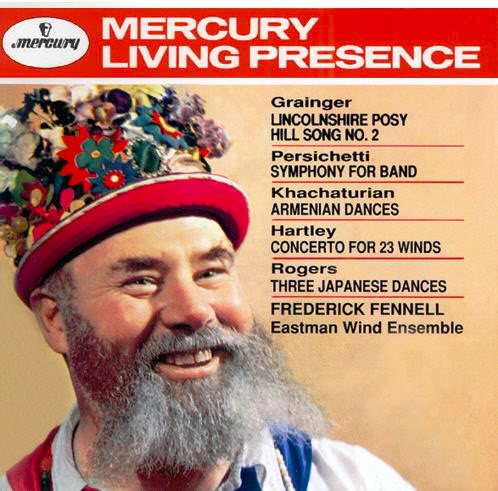 (http://picturepush.com/public/13919600)
(http://picturepush.com/public/13919600)Rare Classical Vinyl: Mercury Living Presence & Other Recordings (http://rareclassicalvinyl.blogspot.de/2012/12/mercury-living-presence-other-recordings.html)
@ astrapot, post 22 is the fennell you looking for.
This 8-CD collection (2 of which I posted before, in their first life as ASV albums)
of colorful Mexican Music includes works by the country’s three best-known
composers, Carlos Ch???vez, Silvestre Revueltas and Manuel Ponce, but also many
items by more "obscure", but no less intriguing coutrymen. For the full list of
composers and works, please see the review by Musicweb below.
Music Composed by (see below)
Played by the Mexico City Philharmonic, Mexican State Symphony Orchestra
And the Royal Philharmonic Orchestra
With Henryk Szeryng (violin) & Jorge Federico Osorio (piano)
Conducted by Enrique Batiz
"The orchestral honours here are shared between three orchestras. The main burden is taken
between the Mexican State Philharmonic and the Mexico City Symphony Orchestra. The Royal
Philharmonic take up the ???slack??? with the Chavez Antigona and Romantica, the Violin Concerto by
Halffter and the Chavez Chapultepec, Ponce???s Ferial and Instantaneas, the Revueltas Toccata and
the Ponce Estampas.
All the recordings have been licensed out to Brilliant by the Sanctuary Group having originally
formed part of ASV???s distinguished Mexican series.
Mexican orchestral music is represented here by three symphonies by Chavez (three of his six),
two violin concertos (Ponce and Halffter), a piano concerto by Ponce and the Ponce Guitar Concerto.
In fact we get all three of Ponce’s dazzlingly imaginative concertos. Otherwise we hear nine pieces
by Revueltas, ten by Chavez, eleven by Ponce including those three concertos and his most
famous piece taken up by many violinists including Heifetz, Estrellita.
Chavez’s Chapultepec overture is cheeky with a dash of Sousa-style excess to add a kick. Ponce’s
Ferial is from 1940 and is a lividly lit though subtle counterpart to Rapsodie espagnole. It was first
conducted by Erich Kleiber. The Instantaneas are a series of short Mexican snapshots with the
rasping rattle and gourd noises we may be familiar with from Villa-Lobos’s Indianist and jungle
pieces. These are interspersed with virile little village dances – sombrero commercial and drowsy
sentimental. Revueltas’s Toccata is jerky and fragmented, like a doll dance escaped from
Pulcinella. Beside Ponce, Revueltas sounds like the modernist. Ponce’s Estampas Nocturnas
are substantial and their language is thoughtful, impressionistic and watercolour-sentimental –
none of the lurid colours we associate with the Mexican sound. This is more Mexico City aspiring
to Vienna than to Indianist and other ethnic origins.
After a disc of lighter if not always slight fare we next encounter three major works. Ponce’s 1942
Violin Concerto is taken by Henryk Szeryng whose singing silver tone suits the work very well.
This is a delightful chucklingly serenading romantic work closer to Barber, Walton and Glazunov
than to anything grim. However something more Bergian seeps into the bones for the central
andante espressivo. The finale is catchy and chipper. It uses the popular song Manitas. Chavez’s
India symphony is from the mid-1930s. It was premiered in New York with the composer
conducting. It’s in a single movement in one track incorporating four episodes. It is alive with
virile rhythmic interest and with the flavour of ethnic percussion: tenebari, grijutian, teponaxtli
and hupenhuehuetl, the latter two being drums and the former rattles. Beyond these decorative
details the lyrical material reminded me of Copland. Revueltas’s four movement La Noche de
las Mayas is a half hour work in four movements. It is extracted from a film score written for
the 1939 film of the same name. Its cinema origins probably explain why the music is often
more commercial and even rather more like Ponce than the tough originality we come to expect
from Revueltas. That modernity can be heard however in the terse, blaring and gritty Noche
de encantamiento with its braying horns and rattle-scrape ostinati.
Madrid-born Rodolfo Halffter left Spain for Mexico in 1939. His 1942 Violin Concerto was
written with Samuel Dushkin in mind; the same Dushkin who commissioned and premiered
the Stravinsky Violin Concerto. It has some of the Stravinsky’s brusque neo-classicism with a
splash of de Falla to mitigate the desiccation. It also sports an affecting central Andante
cantabile. It is heard in its 1953 edition made by the soloist here, Henryk Szeryng. This set
has justified claims to definitive status given the involvement of Szeryng in both the Ponce
and the Halffter.
Moncayo’s Huapango is something of a fixture in Latino classical collections from Bernstein
and Dudamel. It dates from 1941. It’s a beaming bright and sharply rhythmic piece which
is brilliantly orchestrated. Here it is carried off with panache.
Revueltas’s Cuauhnahuac (1930) is his first major orchestral work. It’s a portrait in sound
of the town of Cuernavaca but by its Indian name. It is uproarious, howling and braying,
whooping in the manner of a Markevich score, with a sentimental core and rampant closing pages.
The Ponce Concierto del Sur is played by Alfonso Moreno. It is one of the most instantly pleasing
works on the disc and I commend it to you if you like the Rodrigo Aranjuez, Andaluz or Madrigal.
It has a gift of a tune at 2:02 which returns from time to time. The sierra-cool Andante is hardly
less fine. If you would like to sample then look no further than the final movement. Slake your
thirst for more Rodrigo with this utterly captivating guitar concerto premiered by Segovia and
Ponce in Montevideo in 1943.
Revueltas’s Redes (Nets) I knew from the old RCA LP made by Eduardo Mata in the 1970s. It
is an excitingly dissonant piece of explosive material. This is laced with haunted nostalgic
divagations which can be quite affecting. Redes was written for a socialist-realist film of the
same name which depicted the impoverished life of the fisherman. Three years before that score
he wrote the Homenaje a Garcia Lorca in 1935. It’s a raucous celebratory piece full of sour
dissonance and Stravinskian gestures. Also memorable is the elegiac vinegar of a trumpet solo.
Jimenez’s Tres cartas de Mexico was a discovery for me with its Petrushkan bustle and
poetically accessible local colour. Four guitars (Cecilia Lopez, Juan Reves, Jesus Ruiz, Alfredo
Sanchez Oviedo) put in an appearance in the final Allegro. It’s all very attractive.
Blas Galindo Dimas is better known as Blas Galindo. His Homenaje a Cervantes is neo-
Baroque and undemandingly entertaining. It’s followed by the fluffy Gottschalk-like pearly
glitter of a turn of the century effusion for piano and orchestra by Herrera. Lastly, Chavez’s
transcription of a Buxtehude Zarabanda can be seen in the same league as the massive
orchestrations of Bach organ pieces. This is however rather intensely romantic. These works
lead naturally to Halffter???s transcriptions of three Soler sonatas. Their super-inflated
orchestration and steroidal Handelian glare allow for a rather finely turned Allegretto grazia.
Revuletas’s Sensemaya takes us back into the feral jungle and wild antiquity of the Mayan past.
This is more in the whooping thudding direction of The Rite of Spring. Galindo’s enjoyable Sones
de Mariachi (1940) revels in Mexican postcard brightness. Ponce’s classic hit Estrelita is a
sentimental hit and is better known from the Heifetz transcription. Here it is heard in its heavily
luxurious orchestral version – almost Korngold. Halffter’s 1952 Obertura Festiva is flightily neo-
classical but at times too heavily booted to take wing. More harmonically sour and thorny is the
Tripartita of 1959. Revueltas’s Janitizio of 1933 depicts the revels of a seaside resort. It???s
honking, hip-swaying and uproarious. Although written for an instrumental Octet his Ocho por
Radio (1933) is in much the same squeaky, impudent and characterful vein. Vilanueva’s Vals
Poetico apes the grand metropolitan waltzes of Europe and does so smoothly and with some
style. Chavez’s 1937 Chaconne is another wonderfully inflated and upholstered Buxtehude
transcription belonging in the same noble league as the classic Stokowski-Bach arrangements.
CD 6 is a fascinating all-Ponce collection. The sound glares a bit in the 1912 Ponce Piano
Concerto but the work is in the gleamingly romantic conservative tradition of Liszt, Chopin
and Arensky. Thunder and screes of pearly notes are thrown hither and yon by the impassioned
Jorge Federico Osorio – very enjoyable if not appreciably Mexican. The affecting elegance of
Gavota is in the aristocratic ballroom tradition. Balada Mexicana includes a piano solo part,
here played by Seva Suk. It is once again in the exotic Gottschalk idiom with a smoking
Latino element. The Dance of the Ancient Mexicans is skilled and shapely but the composer
seems to caricature rather than suggest anything at all vivid or dangerous – fun though.
Lastly the three movement Chapultepec is an impressionistic picture premiered in a concert
it shared with Ravel’s Rapsodie espagnole. This quarter-hour piece can be seen as an
extension of Ferial which has a similarly Gallic impressionist signature. It is a fine discovery
and well worth devoting listening time. Poema Elegiaco of 1935 breaks the deferential
European mould with moody ambiguity and even tacit threat. This is one of the most
attractive disks in the set. In fact Ponce emerges as hardly the most original figure but
a composer whose music is often rewarding.
The seventh disc is an all-Chavez affair. His 1947 Toccata for Orchestra begins in an
eerie Berlioz-like chill and finally erupts in a volcanic blast. The notes tell us that this
impressive music is based on an incidental score for a ???Don Quixote??? stage adaptation. The
diptychal Paisajes Mexicanas (1973) is the most recent piece. It has a raw and glaring
edge – something more in common with the blare of the classic Revueltas scores. The
1943 suite La Hija de Colquide (the Medea legend) was written for Martha Graham for
performance at the Library of Congress. The five movement suite is allocated a single
track where in this respect decisions for the rest of the set have been well handled.
It ranges from gentle woodwind musing to indianist rattle, rasp, gong, whistle and
mystery. We hear much the same smoking sense of peril as in Barber’s Medea ballet –
clearly a popular theme. The indianist aspect is to the fore again in the brilliant and
rhythmically emphasised Cantos de Mexico of 1933 which ends in the dazzling white
teeth, frills and uproar predictive of Copland???s El Salon Mexico. I wonder how these
Mexican composers viewed Copland’s work. The short 1953 Baile has that upstart,
cheeky Mexican brightness and serenading brilliance. Both Cantos and the roaring
Baile would pair well with the Copland work or make a nice change from it.
The last disc of the set pairs Chavez and Revueltas. The good though typo-ridden
notes by David Moncur remind us that there are seven Chavez symphonies from the
1916 Sinfonia para orquesta (not numbered) to the 1961 Sixth. There is a Vox set
of all the six numbered symphonies on VoxBox (review review). The Sinfonia de
Antigona is his first numbered symphony. It groans and rasps with Sophoclean
tragedy. The material is drawn from music he wrote for Cocteau’s updated rewrite
of the work. Clearly scarifying Greek themes attracted him as his score for the
Medea-based Martha Graham ballet Hija de Colchide shows. This is stern music with
moments of repose from threat serving to emphasise what they separate yet also
providing some spiritual let-up. The symphony ends in calm.
The Fourth Symphony is the Sinfonia Romantica in three movements. It was written
to a commission from the stupendously active and affluent Louisville Orchestra.
The Sinfonia Romantica is romantic certainly – not quite Howard Hanson but the
first movement recalls Korngold at times. The molto lent middle movement sings
with a little more remorse and reserve. A bustling dynamic enlivens the final Vivo
with skirling trumpet fanfares, woodwind mariachi contributions and rowdy heroics.
The first version of the finale is in fact the Baile heard earlier.
The rest of the last disc is given over to Revueltas. His Caminos is jaunty, agreeably
unsophisticated, explosive, jaunty and oompah-wild. Occasional passages sound
as if Markevitch had worked over the Capriccio Italien. Musica para charlar (Music
to converse to) is drawn from the score he wrote for his 1938 documentary film
Ferrocariles de Baja California (Baja California Railroad). In this sense alone it
parallels Virgil Thomson’s music for the films Louisiana Story and The Plow that
Broke the Plain. It’s not as dissolute and fissile as Caminos and in fact from time to
time amid the railway rhythms it indulges in turn of the century Ballroom lavish.
It’s a specially agreeable score and a little less challenging than some of his classic
works. It’s good that Revueltas chose to rescue it as a concert item. Ventanas
(Windows) of 1931 revels in ambivalence. Its underlying thunder-cloud tension is
sustained throughout. Imperious writing unleashes chaotic forces which rupture
the mood. Revueltas happily sends murderous and rather haphazard military bands
into the street scene with their band parts mixed up. This does not cause them to
lose their overwheening confidence. Instead they lay into the music which at the
last erupts in a furnace blast of sound.
I trust that the Mexican government have bought stacks of these sets and are
giving them away in delegate packs for conferences on the culture and attractions
of a country in whose artistic musical achievements it can take a fierce pride."
Musicweb
Source: Brilliant Classics CDs (my rip!)
Format: mp3, 320k/s (CBR), DDD Stereo
File Size: 1.48 GB (incl. artwork & booklet)
Download Link – https://mega.co.nz/#!pBhjFQKS!SCLXOHP_P2YZTtEnHGrbk2ItuPxLRhP5bpvV2S8 rs_4
Those who click to "Like" this release or in appreciation for my work here will receive
a further album with Mexican orchestral works conducted by Enrique Batiz as a PM.
Enjoy! Don’t share! Buy the original! 🙂
But by the time the Brilliant box came out, some of those ASV CDs had already bronzed into eternity.
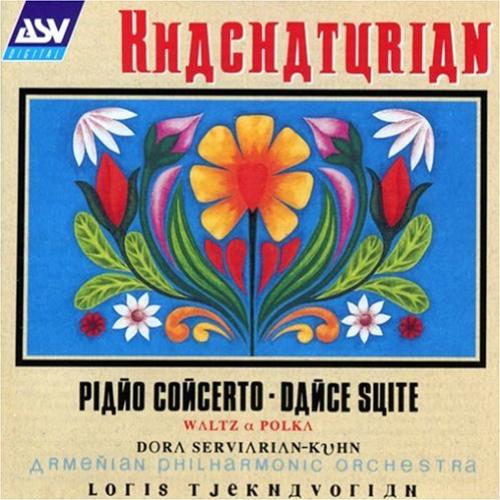 (http://picturepush.com/public/13924326)
(http://picturepush.com/public/13924326)
the version is different (very orchestrated, but interesting)
i give you the link, maby you know it :Odeon (http://www.odeonmusic.blogspot.com) (for download the pass is doremifasol) all seems in flac.
Please, this is NOT a discussion thread.
No.501
This is a second album with neo-romantic/"light" music by English
composer Montague Phillips. You can find the first one here (http://forums.ffshrine.org/f92/wimpel69s-could-film-music-classical-corner-work-121898/33.html#post2428985).
Chronologically the first set of pieces on this disc is the Symphony in C minor. Unfortunately
this work is not complete. The holograph was lost in Germany on the outbreak of the First World War.
However the orchestral parts remained and we are fortunate that the composer chose to reconstruct
the Scherzo and the Adagio during the early nineteen-twenties. These were apparently revised and
issued as two orchestral miniatures – A Spring Rondo and A Summer Nocturne. What we have
here is a tantalising glimpse of a ‘light’ symphony. This is escapist music at its very best. It glories
in the kind of suburban atmosphere in which the composer was living.
The Rebel Maid is Montague Phillips’ best known work; there are still many people around who have
sung in amateur performances of this operetta. It is a work that I have never heard, although I
have worked my way through a few of the piano arrangements of the dances. Although it was
composed during the Great War it was not until 1921 that it was given its first performance at
the London Empire Theatre. The composer extracted this present set of Dances from the work
shortly after the first performance – they are Jig, Gavotte, Graceful Dance and the Villagers’
Dance. They are delightful miniatures in their own right. They have all the attributes of good
light music: good tunes and contrast between sentimental and gay moods.
Montague Phillips lived in the Surrey town of Esher for many years, and no doubt spent much
time exploring the surrounding countryside. The nineteen-thirties was a time of rapid expansion
of the boundaries of Greater London. The music of the Surrey Suite is presented in three
movements: Richmond Park; The Shadowy Pines and Kingston Market. What Phillips is doing
is what we all do from time to time. He was re-creating musically an image or a picture of
what he felt Surrey used to be like – or more appositely what he would like it to be like.
The Revelry Overture commences as it means to go on – with a sparkling curtain raiser. This is
quickly followed by a forward-moving tune. There is little let-up in the general mood of this
music although I feel that there are one or two weak points in the ‘middle eight’ where the
inspiration seems to run dry. However all is forgiven as the ‘well known’ tune returns in all
its glory. This is decidedly happy music. Here are none of the concerns that were haunting
other writers and composers at this time. We do not find reference to the rise of Nazism
here or the horrors of the Spanish Civil War.
Music Composed by Montague Phillips
Played by the BBC Concert Orchestra
Conducted by Gavin Sutherland
"Montague Phillips (1895-1969) was a contemporary of British composers Arnold Bax and
York Bowen and studied with Frederick Corder, among others, at the Royal Academy of Music.
He’s known primarily for orchestral songs and what is referred to as "light music".
This CD contains eight of his orchestral selections and gets off to a rousing start with the Revelry
Overture. A short (6 minute) piece that reminded this listener of Eric Coates, it is lots of fun.
The Moorland Idyll (6 minutes) has a lovely passage for flute followed by English horn (or oboe?)
and sounds, especially at beginning and end, very Elgarian. Four dances from Phillips’ light
opera "Rebel Maid" feature threee brief fast tempo dances plus a gorgeous gavotte that I
wished wouldn’t end.
Phillips wrote a symphony in C minor in 1911 that was lost in Germany during the Great War.
(One would like to know more about this.) We have here two reconstructed movements (15:40)
from that work, the second a summer nocturne that is quite appealing.
A Survey Suite (10:50), Shakesperean Scherzo (7 minutes), Arabesque (4:16), and 15 minute
Sinfonietta complete the 75 plus minute disc.
Where has this composer been all my life? I’m sorry I hadn’t come across Montague Phillips
earlier but also glad I found this CD while browsing in a public library. All but two of the tracks
are first recordings, so it is likely Phillips’ music is not very familiar outside the UK.
I strongly recommend this disc to anyone who enjoys British light music or just plain tuneful
music. It contains an excellent ordering of selections, meaning it is easy to listen to the entire
program with little likelihood of fatigue or boredom. The BBC Concert Orchestra, directed
by Gavin Sutherland, plays superbly, and the recording is bright and closely miked. There
are informative liner notes written by British music expert Lewis Foreman. But above all,
thanks go to a person I have come to respect greatly, Michael Dutton, for bringing us this
attractive CD."
Amazon Reviewer
Source: Dutton Epoch (my rip!)
Format: mp3, 320k/s (CBR), DDD Stereo
File Size: 171 MB
Download Link – https://mega.co.nz/#!4RInQCaQ!SVCsEjd339MaW5yNgNA_WSTl5uEx8hOgHWw-UY4FoKQ
Enjoy! Don’t share! Buy the original!
And now for something completely different:
Born in the UK of Russian/French parents, Nick Bic???t has written over 150 scores and
soundtracks for film, television and theatre. Twice nominated for a BAFTA, his film and television
scores include A Christmas Carol (George C Scott), The Scarlet Pimpernel (Antony Andrews/Sir
Ian McKellen/Jane Seymour), Wetherby (David Hare), and The Reflecting Skin (Philip Ridley). He
has composed for the Royal Shakespeare Company and the National Theatre, written eleven
musicals and an opera The Knife, with David Hare, (best musical score, 1989 New York Drama
Desk Awards). Other collaborators include Tony Bic???t, Edward Bond, Adrian Mitchell Howard
Brenton and Ted Hughes. His orchestral work Under the Eye of Heaven was performed at the
Barbican and London Arena. Other concert performances include When Will There Be Peace?,
an internationally televised open air concert for the International Red Cross in Geneva, and in 2000
Symphony in Morris Minor, commissioned to mark the millennium, and performed in Oxford
to an audience of 50,000.
Although the composer himself characterizes Under the Eye of Heaven as an orchestral work, the
score actually features a lot of electronic sounds as well, and though the piece is obviously
pretentious ambitious, the general style is closer to 1980-ish pop than to traditional classical music.
So, in essence, one would have to call it "crossover" in modern-speak.
Music Composed by Nick Bic???t
Played by the London Chamber Orchestra
Conducted by Christopher Warren-Green
Source: Virgin CD (my rip!)
Format: mp3, 320k/s (CBR), DDD Stereo
File Size: 115 MB
Download Link – https://mega.co.nz/#!VZQAwJbT!DbcvtGE4ZzjxEvzyTpUTVnShu-J815DQreoTk2Ae5qA
Enjoy! Don’t share! Buy the original! 🙂
Thanks to those who continually "like" my uploads here. It doesn’t seem that much work, but apparently it IS for many. 😉
In the history of modern Chinese music, Nie Er (1912- 1935) has undoubtedly taken a special position.
lt is not only because his March of the Volunteers was later adopted as the present national anthem of the
People???s Republic of China, but in his short life, he created for the people many other songs and instrumental
pieces. Some of his works reflected the sufferings and groaning of the broad mass of the labouring people at
that time, and others were an expression of the patriotism and resistance of the Chinese people in face of
the Japanese aggression. His works, some full of tremendous momentum and imbued with the spirit of the
age, some lyrical, graceful and in a strongly national style, were not only great favourites of Chinese at home
and abroad then, but are also still treasured by the Chinese people today as precious elements of the
Chinese national music, Though his career as a composer lasted for only two years, from the publishing
of his first composition to his accidental death when swimming in the sea of Japan, his works have had a
uniquely profound influence on modern Chinese music. On July 17, 1935, he possibly drowned while
swimming in Fujisawa, Kanagawa, Japan, at the age of twenty-three. He may have been en route to the
Soviet Union, passing through Japan to receive training, sent by the Chinese Communist Party. Some
suspect that he was killed by Japanese and others, that he was killed by Chinese Nationalists, as
he was in Japan to flee from them.
Nie Er wrote a total of 37 pieces in his life, all in the two years before his death. Included in this collection
are 8 orchestral "songs" – vignettes that are typical of his style, and some of these may have originated
as themes for movies, much like the famous March of the Volunteers, from the film "Sons and Daughters
in a Time of Storm" of 1934, which in 1949 became the Chinese national anthem.
Music Composed by Nie Er
Played by the Shanghai Philharmonic Orchestra
Conducted by Cao Peng
Tracks:
Village Girl Beyond the Great Wall
Shui Bing (violin)
Graduation Song
You Dachun (piano)
Leaving Southeast Asia
Kong Yingzheng (viola)
Singing Girl Downtrodden
Shui Bing (violin)
Song of the Newsboy
You Dachun (piano)
Song of Whirling Flowers
Xiong Zhao (cello)
Song of Mei Niang
Kong Yingzheng (viola)
Source: Naxos "Yellow River" CD (my rip!)
Format: mp3, 320k/s (CBR), DDD Stereo
File Size: 161 MB (incl. cover)
Download Link – https://mega.co.nz/#!dQ5TUDTA!PqivPAeGIKA_GvuOrFrrZRgZaitFKyoyEwO-oaYCqSA
Enjoy! Don’t share! Buy the original! 🙂
In the history of modern Chinese music, Nie Er (1912- 1935) has undoubtedly taken a special position.
lt is not only because his March of the Volunteers was later adopted as the present national anthem of the
People???s Republic of China, but in his short life, he created for the people many other songs and instrumental
pieces. Some of his works reflected the sufferings and groaning of the broad mass of the labouring people at
that time, and others were an expression of the patriotism and resistance of the Chinese people in face of
the Japanese aggression. His works, some full of tremendous momentum and imbued with the spirit of the
age, some lyrical, graceful and in a strongly national style, were not only great favourites of Chinese at home
and abroad then, but are also still treasured by the Chinese people today as precious elements of the
Chinese national music, Though his career as a composer lasted for only two years, from the publishing
of his first composition to his accidental death when swimming in the sea of Japan, his works have had a
uniquely profound influence on modern Chinese music. On July 17, 1935, he possibly drowned while
swimming in Fujisawa, Kanagawa, Japan, at the age of twenty-three. He may have been en route to the
Soviet Union, passing through Japan to receive training, sent by the Chinese Communist Party. Some
suspect that he was killed by Japanese and others, that he was killed by Chinese Nationalists, as
he was in Japan to flee from them.
Nie Er wrote a total of 37 pieces in his life, all in the two years before his death. Included in this collection
are 8 orchestral "songs" – vignettes that are typical of his style, and some of these may have originated
as themes for movies, much like the famous March of the Volunteers, from the film "Sons and Daughters
in a Time of Storm" of 1934, which in 1949 became the Chinese national anthem.
Download Link – https://mega.co.nz/#!dQ5TUDTA!PqivPAeGIKA_GvuOrFrrZRgZaitFKyoyEwO-oaYCqSA
Enjoy! Don’t share! Buy the original! 🙂
Dear Wimpel
Cd by Yellow River series have been ever physically released by Naxos or are they only available through download?
Best
No.504
The son of an army engineer who eventually attained the rank of general in the Russian army, composer
Nikolai Myaskovsky (1881-1950) was expected to follow in his father’s footsteps. However, after his mother’s
death in 1890, Myaskovsky was brought up by his aunt, a former singer, who encouraged his musical
interests; his first compositions — piano pieces much influenced by Chopin — date from that time.
In 1903, Myaskovsky took a course in harmony from Reinhold Gli???re, which helped him decide on a
music career. He continued his studies with Nikolay Rimsky-Korsakov and Anatoly Liadov at the St.
Petersburg Conservatory (1906-1911); his Symphony No. 1 (1908) won him a scholarship that allowed
him to complete his education. Myaskovsky then spent some time as a private teacher and music
journalist. During World War I, he served on the front for three years, then worked on military fortifications.
Some of those experiences are reflected in his Symphonies Nos. 4 and 5, both of which were partially
sketched on the front.
In 1940, Myaskovsky received an honorary Doctor of Arts degree from the Moscow Conservatory. His
Symphony No. 21 of that year, written for the 50th anniversary of the Chicago Symphony, earned for
the composer the first of his three Stalin Prizes and remains perhaps his best-known work. During
World War II he was relocated to the Caucasus, later to Tbilisi and Kirghizia. The hardships he experienced
didn’t prevent him from composing, and he completed two symphonies, a Cello Concerto, and other
works during those years.
Despite the prominent place he held in Russian musical society and the title of People’s Artist he
received in 1946, Myaskovsky was one of the composers — along with Sergei Prokofiev, Dmitri
Shostakovich, Aram Khachaturian, and others — denounced in 1948 by the Central Committee of
the Communist Party for formalism, modernism, and ignoring the needs of the Soviet people and
society. He wasn’t criticized as harshly as the others, but the frequently pessimistic tone of his music
was noted, and he was accused, through his teaching, of injecting "inharmonious music into the
Soviet educational system." Myaskovsky was quite ill by this time, but was able to reply in part
to the charges made against him with his Symphony No. 27 (1949-1950), which was premiered
four months after his death and won him his third, posthumous, Stalin Prize.
The music in the tone poem Alastor is dark, partly gloomy Tchaikovskian, part Baxian and
part Rachmaninov???s Isle of the Dead. Myaskovsky???s trademark lyrical contours are present. This stern
and lustrous major symphonic piece is contemporaneous with the Third Symphony. It is the concentrated
essence of tragic romance ??? apt to Shelley???s ???Alastor??? or for that matter Byron???s ???Manfred???. It ends in a
masterly fading shimmer.
The CD, which is part of a boxed set also features the Divertissement, op.80 and Links, op.65.
Music Composed by Nikolai Myaskovsky
Played by the USSR State Symphony Orchestra
Conducted by Evgeny Svetlanov
"Yevgeny (or Evgeny) Feodorovich Svetlanov was one of the twentieth century’s leading
Russian conductors. He came from a musical and theatrical family: His father was a soloist in
the Bolshoi Theater and his mother was an artist in a mime theater. Svetlanov was a 1951
graduate of the Gnesin Institute where he studied composition with Mikhail Gnesin and piano
with Mariya Gurvich; later, Svetlanov continued his studies with Yury Shaporin in composition
and Alexander Gauk in conducting at the Moscow Conservatory.
While Svetlanov was still a student, he conducted with the All-Union Radio (1953) and also
first conducted the State Symphony Orchestra in 1954. Svetlanov became an assistant conductor
at the Bolshoi Theater in 1955, and in 1962, he was appointed to the position of principal
conductor. During his time there, Svetlanov became a favorite for the fresh, colorful sound
he brought to the Russian opera repertory, particularly in operas of Nikolay Rimsky-Korsakov
and in Tchaikovsky’s The Queen of Spades. It was he who led the Bolshoi on its historic visit
to the stage of La Scala in Milan.
In 1965, Svetlanov became the principal conductor of the U.S.S.R. State Symphony Orchestra,
now known as the Russian State Symphony Orchestra), and remained in that position until
1999, when he retired. This position became the basis of Svetlanov’s conducting and recording
career. Svetlanov decided to undertake a comprehensive program of recording all the major
orchestral music of Russian composers from Glinka to Myaskovsky, a span of something more
than a century. Svetlanov also recorded the music of Russian composers of later days, such
as Shostakovich, Prokofiev, Shchedrin, Knipper, Shebalin, Khachaturian and Eshpa???. Over
his lifetime, Svetlanov managed to collect several Soviet state awards, including People’s
Artist of the U.S.S.R. in 1968, the 1975 Lenin Prize, and the Glinka Prize in 1975. In 1979,
Svetlanov was named principal guest conductor of the London Symphony Orchestra; he
also worked with the Residentie Orchestra of the Hague and leading orchestras of Japan,
France, and Sweden. In 1998, Russian president Boris Yeltsin observed Svetlanov’s seventieth
birthday with national honors. Upon Svetlanov’s death, English critic David Wilkins recalled
the conductor as "an essential champion of the soul of Russian music."
Svetlanov was also a composer and wrote symphonic, chamber, and vocal music, including
a piano concerto. He was married to Russian soprano Larisa Avdeyeva. Svetlanov’s life
was portrayed in the Soviet film biography Dirizhor (The Conductor)."
All Music
Source: Warner CD (my rip)
Format: mp3, 320k/s (CBR), ADD(?) Stereo
File Size: 176 MB
Download Link – https://mega.co.nz/#!sMom1SwB!XsHdRVul5zKZmsOzrPso3ijQN5BGX1gi-n_-y-SB2Bs
Enjoy! Don’t share! Buy the original! 🙂
Ottorino Respighi (1879-1936) began work on the Trittico Botticelliano in March 1927 upon
returning from his first tour of the United States. Elizabeth Sprague Coolidge organized the concert for the
premiere later that year. The Botticelli Triptych was inspired by three paintings by Florentine painter
Sandro Botticelli (1445-1510). All three paintings are now in the Galleria degli Uffizi in Florence.
Respighi’s interest in Gregorian chant, modality and other archaisms are on appropriately on display here.
The Birds (Gli uccelli) is a suite for small orchestra. Dating from 1927, the work is based on
music from the 18th-century and represents an attempt to transcribe birdsong into musical notation.
The work is in five movements. The suite was used for the ballet of the same name, with choreography
by Cia Fornaroli, first performed at Sanremo Casin??? Municipale on 19 February 1933.
Ancient Airs and Dances (Antiche arie e danze) is a set of three orchestral suites. In addition
to being a renowned composer and conductor, Respighi was also a notable musicologist. His interest in Italian
music of the 16th, 17th, and 18th centuries led him to compose works inspired by the music of these periods.
Suite No.1 was composed in 1917. It was based on Renaissance lute pieces by Simone Molinaro,
Vincenzo Galilei (father of Galileo Galilei), Michael Praetorius, and additional anonymous composers.
Suite No.3 was composed in 1932. It differs from the previous two suites in that it is arranged for
strings only and somewhat melancholy in overall mood. It is based on lute songs by Besard, a piece for baroque
guitar by Ludovico Roncalli, and lute pieces by Santino Garsi da Parma and additional anonymous composers.
Music Composed by Ottorino Respighi
Played by The Saint Paul Chamber Orchestra
Conducted by Hugh Wolff
"Arved Ashby praised the Orpheus Chamber Orchestra’s all-Respighi disc quite highly
in the March/April 1994 American Record Guide. As fine as that earlier effort certainly was,
this new recording of the same program by the St. Paul Chamber Orchestra is even more
delightful and charming, due in large part to the impeccable leadership of Hugh Wolff. His
considerable skill as a colorist is evident immediately when the glorious sound of the shimmering
strings at the outset of the Boticelli Pictures emerges from your speakers. Wolff’s generally
relaxed, unhurried pacing lends a magical, timeless quality to the slow movements of the
two Ancient Airs and Dances suites and especially the ‘Adoration of the Magi’ from Boticelli,
which has never before sounded quite as touching or exotic. Teldec’s helpful booklet includes
black and white photos of all three Boticelli paintings.
Gentle humor and gracious warmth characterize Wolff’s version of The Birds. If my spirit ever
needs a lift, all I need do is listen to the first 60 seconds of V, which is one of the most
enthralling and beautiful musical experiences ever captured on disc. The joyous enthusiasm
and seductive playing of the St. Paul band makes their versions of the two Ancient Airs and
Dances suites exceptional. The lovely vocal quality of the string ensemble in Suite III serves
to remind us that these ancient melodies were indeed "airs" as well as "dances". The St. Paul
Chamber Orchestra is truly an ensemble of virtuosos, and Teldec’s utterly transparent recording
captures every minute detail of their playing with perfect fidelity. This is one of the most
completely satisfying releases I’ve heard in years. Now Teldec, how long must we wait before
you get these artists back in the studio to record the secondAirs and Dances Suite?"
Classical.NET
Source: Teldec CD (my rip!)
Format: mp3, 320k/s (CBR); DDD Stereo
File Size: 160 MB
Download Link – https://mega.co.nz/#!tN5EzCRS!cR02PxPPF0iKeS-8p1DURE8373RtcX8xxSXu-5xZIzA
Enjoy! Don’t share! Buy the originial! 🙂
The Estonian violinist Mihkel Kerem (born in Tallinn in 1981) is familiar as a performer in Britain
as well as at home; he is also a prolific composer, with over one hundred works to his credit, three
symphonies among them. The three-movement Third Symphony (2003) and the Lamento for
viola and strings (2008???9) lie downstream from Shostakovich and Boris Tishchenko, whereas the
String Sextet (2004), cast in a single half-hour span, has its musical starting-point and initial
poetic impulse in Schoenberg???s Verkl???rte Nacht but also manifests the polyphonic lyricism of Strauss???
Metamorphosen. All three works are concerned with the expression of human emotions in music,
in the Third Symphony and Lamento with the struggle of the individual voice against
oppressive ideology.
Music Composed by Mihkel Kerem
Played by the Estonian National Symphony Orchestra
And the Tallinn Chamber Orchestra and Ensemble
Conducted by (& viola soloist) Mikk Murdvee
"Mihkel Kerem is an Estonian violinist and composer, and in the latter capacity he made his debut
on a Toccata recording released early last year, a collection of his marvellously mature early
violin sonatas (TOCC 0140, review). This equally excellent follow-up gives music lovers the opportunity
to hear Kerem’s skill and imagination applied on the symphonic scale, as well as in a pair of larger-
scale chamber works, all in premiere recordings.
Kerem’s symphony title is naively provocative, to put it mildly, a controversy added to by the cover
photo depicting concentration camp inmates. For Kerem this work attempts "to remind people of
the dangers of autocracy and its ideologies", particularly with regard to "the dangerous downside
of selective amnesia" over "what went on in the Soviet Union". Yet surely the only victims of
communism are ideological ones, those in thrall to its doctrines and dogmas? Communism is a
political idea; it takes an organisation or state to start incarcerating, torturing and killing. Kerem
also clearly conflates soviet communism and autocracy – Putin’s capitalist Russia is in many ways
as autocratic as it was post Stalin.
At any rate, the music is provocative too, in the sense that it pushes the tonally attuned listener
into uncomfortable places at times, whilst the relentlessly repeated motif towards the end of the first
movement veers towards film-score minimalism. Yet this is all part of the attraction of Kerem’s music
– a highly expressive blend of two parts traditional tonality, one part modernism and one part
postmodernism, sounding in the symphony not unlike Shostakovich in ironic mode, though sometimes
reminiscent of a contemporary version of Stravinsky’s Rite of Spring. In his notes, in fact, Kerem
admits to adapting Shostakovich’s style as the only way to get into the writing of the work.
Whatever it sounds like, though, it is an outstanding work, sure to leave the listener wondering if
Toccata have any plans for Kerem’s first two symphonies. The Estonian National Symphony Orchestra,
though little known outside eastern Europe, can boast a fifty-year association with Neeme J???rvi and
a sizeable discography championing many regional composers. Under Mikk Murdvee’s direction the
listener finds them here in compelling form.
The remaining items are for smaller forces and strings only. Lamento certainly lives up to its title, a
mournful, desolate work darkening the atmosphere still further after the symphony. The viola (in the
original scoring a cello) represents "a lone human voice in a world of disappointment", though it is
easy to imagine the piece as another threnody for the war dead. Murdvee is back again to conduct,
but also as soloist. He went to school with Kerem, and a lasting friendship has seen him give the
premiere as dedicatee of many of Kerem’s works, including the more recent violin sonata no.3 and
the sonata for solo violin. Needless to say, Murdvee was soloist on TOCC 0140. He is also a fine
violist, as evidenced by his searing performance of the Lamento.
The string sextet offers some respite from the gloominess, originating in Kerem’s mind as a kind
of ‘prequel’ to Schoenberg’s Verkl???rte Nacht, imagining the woman in question in a state of
emotional turmoil the night before she takes the moonlit walk to confess her pregnancy.
Appropriating some of Schoenberg’s material as the work does, the listener must accept numerous
pages of extreme chromaticism, although the ending is firmly in the key of D major, expressive
of sunrise and sweet sleep at last. The Tallinn Ensemble – including Murdvee now on violin! –
have the technique and endurance for a persuasive reading of this imposing addition to the
string sextet repertoire."
Musicweb
Source: Toccata CD (my rip!)
Format: mp3, 320k/s (CBR), DDD Stereo
File Size: 162 MB (incl. cover & booklet)
Download Link – https://mega.co.nz/#!pVIyzIpb!Vb1VFBwa5hq0RmuHjF7xAwvFHcd2nL–r7LM_trGHVs
Enjoy! Don’t share! Buy the original! 🙂
Please, in the future, send requests per PM if they’re meant for me. For general requests, use the "Classical Requests" thread on this same board. Thank you.
It doesn’t belong in this thread, so I won’t "number" the upload:
Bernstein: Serenade after Plato
Barber: Violin Concerto
Foss: Three American Pieces
Itzhak Perlman (violin)
Boston Symphony Orchestra
Seiji Ozawa (conductor)
Download Link (mp3, my rip) – https://mega.co.nz/#!Jw1FmBpD!ReXAQBrGmah_-ci_m4sr1lTeIhFprBpfFGhd25unoqc
Meanwhile:
No.507
Paavo Johannes Heininen (born 13 January 1938 in J???rvenp??????) is a Finnish composer and pianist. He studied
at the Sibelius Academy in Helsinki, where he was taught composition by Aarre Merikanto, Einojuhani Rautavaara, Einar
Englund, and Joonas Kokkonen. He continued his studies in Cologne with Bernd Alois Zimmermann; at the Juilliard
School of Music in New York with Vincent Persichetti and Eduard Steuermann; and privately in Poland with Witold
Lutosławski. He has also studied musicology at the University of Helsinki.
Heininen is one of the most important Finnish modernist composers. His works can be roughly divided into two
periods: dodecaphonic (c. 1957???1975) and postserialist (from 1976 onwards). Due to the hostile reactions to
his early works, particularly the First Symphony, his works up to the 1980s can be roughly divided in two groups:
more personal and complex pieces and more approachable, audience-friendly pieces such as the
Second Symphony, "Petite symphonie joyeuse".
In addition to original works, Heininen has reconstructed several pieces that his composition teacher Aarre Merikanto
mutilated or destroyed, including the latter’s Symphonic Study (1928) and String Sextet (1932) and written the
violin concerto Tuuminki (A Notion) as a "re-imagining" of Merikanto’s completely destroyed third violin concerto.
Alongside composition, Heininen has been active as a pianist, premiering and recording several of his own works.
He is also known as an essayist and has written a large number of composer portraits.
Music Composed by Paavo Heininen
Played by the Finnish Radio Symphony and Ostrobothnian Chamber Orchestras
Conducted by Ulf S???derblom & Juha Kangas
"When I began composing my third symphony, in 1968, I wanted it to be born along on wings like the music
of Richard Strauss, and to contain crystal structures as brilliantly clear as in late Webern. For there is
crystal clarity in the precisely ordered relations of the motif events, and the gestural language of the
work does have something in common with RS: it is music that breathes expansively in both its tone
and its form; as regards content, when there is not a melodic flowering (as I see it) – then there are
rushing glissandos, menacing crescendos and quick rhythmic flashes.
The symphony is in one, two, three or four movements. Four, because it is divided up into allegro-scherzo-
andante-finale, one because it constitutes an unbroken, thematically uniform entity, two because the
first two and the last two movements form pairs by merging into one another via a climactic transition,
while in the middle of the work there is a caesura representing a state of complete rest; least of all this
is a three movement work, only in the sense that at the end the finale (by then understood to be
"part four") turns out to be a continuation of the first movement.
Floral View with Maidens Singing was composed in late summer, 1982 during a pause in the composition
of The Damask Drum and at around the time I began working on my first computer composition DICTA.
This music needs even less explanation than any other: the Finnish folk melody "Det gingo tv??? flickor
i rosende lund" is probably familiar to many listeners just as it is to me in the arrangement for string
orchestra by Karl Ekman. The world of folk music as a whole is just as remote to me since "Tytt???jen
k???vely" as it was before: the next ‘trad’ melody to interest me is more likely to come from jazz than
from folk music.
The manuscript of this work bears different variants on the name: "Floral view with maidens singing"
in English, while the German text claims that the work is "harmonic-contrapuntal variations on a
traditional melody". Both are true, and I wish to stress both the importance of the clearly conscious
approach and the vital affinity between this approach with a warm acceptance of the fullness of life.
Before being transformed into action, clear consciousness must be clearly conseptualised: let not
‘rational argument’ mean a propensity for denying half the things reason does indeed know to be
inherently human: let not ‘realism’ mean doing whatever is easy to execute with eyes closed to
the future: let not the word ‘sin’ be used as a vexed code name for eroticism when it is
unfashionable to call war a sin."
Paavo Heininen
Source: Ondine CD (my rip!)
Format: mp3, 320k/s (CBR), DDD Stereo
File Size: 146 MB
Download Link – https://mega.co.nz/#!sJoXGarY!eZ60MQuVDJehNNOqn47C1iZQmaZb9cNpqRGFm98 MLZo
Enjoy! Don’t share! Buy the original! 🙂
In my opinion, one of the best versions available!
Aus Italien, Op.16 (From Italy) is a tone poem for full orchestra composed by Richard Strauss
in 1886. It was inspired by the composer’s visit to Italy (encouraged by Johannes Brahms) in the summer of
the same year, where he travelled to Rome, Bologna, Naples, Sorrento, Salerno, and Capri. He began to
sketch the work while still on the journey. The full score of the work, Strauss’s first tone poem, was completed
in Munich on September 12, 1886. The work is named by the composer as "Symphonic Fantasy", and is
dedicated to his mentor Hans von B???low. It is the only work by Richard Strauss for which he himself wrote
a specific program. The entire work takes over forty minutes to perform. Strauss incorporated the tune of
"Funicul???, Funicul???" into the symphony’s fourth part "Scenes from Neapolitan Life", thinking it was a traditional
Italian folk song, when it was in fact a piece written by Luigi Denza in 1880.
Macbeth is a symphonic poem written between 1886 and 1888. It was only his second tone poem,
which Strauss described as "a completely new path" for him compositionally. Written in some semblance
of sonata form, the piece was revised more thoroughly than any of Strauss’s other works; these revisions,
focused primarily on the development and recapitulation sections, show how much the composer was struggling
at this point in his career to balance narrative content with musical form.
Macbeth’s unpopularity has been credited to many things over the years. It has been accused of having
no memorable themes. Untrue — the themes are mostly not of the long, voluptuous variety that admittedly
endear listeners to Strauss’ other tone poems, but there are plenty of extraordinary and evocative motives,
and their use is ingenious. There is, in fact, one gloriously self-indulgent melody that might challenge any
of Don Juan’s famous tunes. Macbeth has been called too obvious an attempt to mimic the style of Liszt’s
symphonic poems, which is also untrue — the work is, at heart, absolutely un-Lisztian. Probably the real
reason is a very simple one: Shakespeare’s drama is a cold, gray one, and Strauss’ 20-minute condensation
of it follows suit — musicians and audiences don’t seem to know what to do with a Strauss who isn’t colorful,
shimmering, and velvety.
Music Composed by Richard Strauss
Played by the Tonhalle-Orchester Z???rich
Conducted by David Zinman
"Currently in his final season as Music Director of the Tonhalle-Orchester Z???rich, David Zinman
conducted all the leading North American orchestras, including the Chicago Symphony, Boston
Symphony, Cleveland and Philadelphia orchestras and the New York Philharmonic, with whom he
has developed a regular relationship. His European engagements have included the Berliner
Philharmoniker, the Royal Concertgebouw, London Symphony, London Philharmonic and Philharmonia
orchestras, as well as the hr-Sinfonieorchester, M???nchner Philharmoniker, NDR Sinfonieorchester,
Symphonieorchester des Bayerischen Rundfunks, WDR Sinfonieorchester, and L???Orchestre de Paris.
David Zinman and the Tonhalle-Orchester Z???rich have most recently released a disc entitled Wagner
in Switzerland, as well as collaborating with violinist Julia Fischer and Decca Classics for the Bruch
and Dvoř???k concertos. Recently completed cycles with the orchestra include Schubert, Brahms
and Mahler, all of which were highly acclaimed; the Mahler Symphony No.8 disc receiving a 2011
ECHO Klassik Award. Together they have also recorded the Schumann symphonies and Strauss
orchestral works, as well as a Beethoven cycle, which sold over one million copies."
Source: Arte Nova CD (my rip!)
Format: mp3, 320k/s (CBR), DDD Stereo
File Size: 149 MB
Download Link – https://mega.co.nz/#!QR5lyCwB!dO6aqDCMokLdi9uYyF4pxFe0vYx6pbRaszXUn_B FR0s
Enjoy! Don’t share! Buy the original! 🙂
if someone need the back cover for tracklist and timing
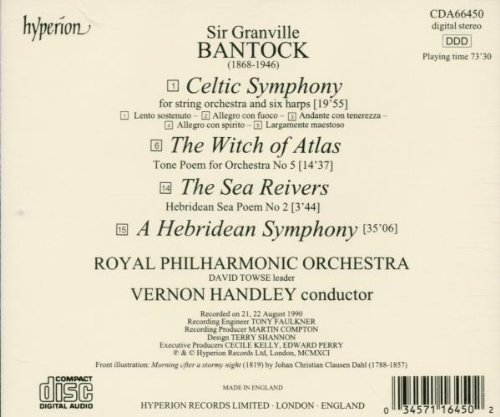 (http://picturepush.com/public/13937402)
(http://picturepush.com/public/13937402)
by the way, dear friend, do you have (by any chance) the complete ballet of Mossolov "Steel" ? i just can’t found it anywhere.
don’t know what we do whitout you
I only got Mossolov’s "Zavod" (Iron Foundry), a 3 minute piece, the original ballet suite is apparently no longer available even as a score, much less a recording.
Do you have this recording by the way?
SHOSTAKOVICH MOSOLOV Salonen – Download – Deutsche Grammophon Gesellschaft (http://www.deutschegrammophon.com/en/cat/4777348)
It was composed between 1926 and 1927 as the first movement of the ballet suite Stal ("Steel"). The remaining movements of Steel, "In Prison," "At the Ball," and "On the Square" have been lost, and Iron Foundry is performed today as a standalone orchestral episode.
Iron Foundry – Wikipedia, the free encyclopedia (http://en.wikipedia.org/wiki/Iron_Foundry)
at least we have the masterpiece "Iron fondry" and we can dream about the rest.
SHOSTAKOVICH MOSOLOV Salonen – Download – Deutsche Grammophon Gesellschaft (http://www.deutschegrammophon.com/en/cat/4777348)
No, I got Svetlanov’s and Chailly’s versions.
Alexander Mosolov (1900-1973, aka Mossolov) is considered the prime representative of 1920s Russian Futurism.
His music from before 1930 is mechanistic, highly dramatic, anti-sentimental and demonstrates no concern for popular appeal.
Mosolov emphasizes motor rhythms and ostinati, and his futurist pieces are written at an extremely high level of dissonance.
Although Mosolov was forced to abandon this idiom with the rise of Stalin, his futurist compositions garnered a lot of
attention, had a definite impact on composers such as Shostakovich, and speak effectively to later trends — in this
sense they were truly "futuristic." Mosolov’s first works were launched at an Association of Contemporary Music concert
held in Moscow in September 1924. The immediate critical response to Mosolov’s music was strongly negative,
Mosolov being attacked over the "unsuitability" of his artistic goals and his aloof attitude towards public taste. Mosolov
answered these charges with the ballet, Stal (Steel), first given in December 1927. The first section of the ballet
(Zavod [The Iron Foundry]) was a monumental success both in Russia and throughout the world. While the piece
is dissonant in the extreme, Mosolov coordinates the mechanistic rhythms into specific orchestral groups that work together
like cogs in a well-oiled machine. The dramatic intensity of Zavod has kept it in use as cinematic stock library music long
after it was forgotten as a concert work.
Sergei Prokofiev’s Symphony No.3 sometimes carries the nickname, The Fiery Angel, after Prokofiev’s
opera of that title. The composer had composed that opera under contract to the St???dtische Oper in Berlin and was to have
it finished for that company’s 1927 – 1928 season. But Prokofiev missed the deadline and, despite further negotiations with
other opera companies, failed to attain a performance for the work. Because he had worked on it sporadically for nearly eight
years, he was reluctant to let it languish unperformed, especially since he believed it contained some of his finest music. After
hearing a Koussevitsky-led concert performance of the opera’s second act in Paris, Prokofiev decided that the music might
work well as a symphony, and thus embarked on fashioning his Third Symphony in 1928 from the then-unperformed opera,
The Fiery Angel.
Edgar Var???se’s passionate views concerning composition and the physicality of sound are expressed coherently in
Arcana. In this work, a kind of a freely extended passacaglia, a basic 11-note musical idea is subjected to all kinds
of permutations and variations, eventually returning in an echo of its original shape just before a coda. The musical continuity
provided by this scheme allowed Var???se great freedom in orchestration, enabling him to frequently change instrumental
combinations without much fear of confusing the listener behind. The works repetetiveness, revealing certain obvious patterns,
also allows the listeners to better appreciate the painstakingly chosen and constructed timbres. The orchestra required for
Arcana is enormous: 120 players on a greater number of instruments, including 40 different percussions that are a
constant presence in the overall sound. Disliking the lack of pitch-precision in the strings, Var???se uses the string section
quite idiosyncratically. While Var???se described Arcana as a symphonic poem, his critics, perhaps more astutely,
have relied on visual analogies to describe the work, evoking such objects as paintings and frescoes. The harmonic stasis
of the piece and its emphasis on color — it is a kind of visualized music — do invite such analogies.
Music by Alexander Mosolov, Sergei Prokofiev & Edgar Var???se
Played by the Royal Concertgebouw Orchestra Amsterdam
Conducted by Riccardo Chailly
"This is one of Riccardo Chailly’s finest recordings, and a wonderful concept: 1920s modernism as embodied
in three very major works, one Russian, one French, and one (the Prokofiev) by a Russian composer working in
France. The performances are uniformly magnificent: exciting, virtuosic, and extremely well recorded. Alexander
Mosolov’s Iron Foundry doesn’t get played or recorded as often as it deserves to be–it’s actually quite tuneful,
and good, noisy fun. There are three great recordings of Prokofiev’s scorching Third Symphony (music taken from
his opera The Fiery Angel): Muti’s, J???rvi’s, and this one. This is not music that offers its performers much interpretive
freedom; you just have to play the living daylights out of it, and that’s exactly what happens here, with a particularly
slithery, scurrying scherzo. Arcana also goes splendidly well–it would later turn up again in Chailly’s complete
Var???se set, but it’s nice to have separately for those who don’t want to go whole hog. Available "on demand"
from Arkivmusic.com, this always has been a major release, and it deserves a home in every serious collection."
Classics Today http://i1084.photobucket.com/albums/j415/wimpel69/p10s10_zps00a57300.gif
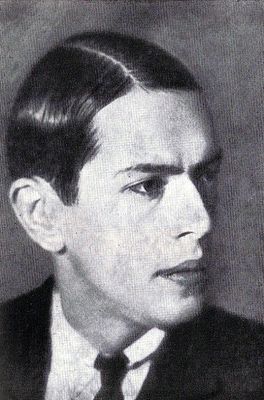 http://i1084.photobucket.com/albums/j415/wimpel69/varese_zps85d20e09.gif
http://i1084.photobucket.com/albums/j415/wimpel69/varese_zps85d20e09.gif
Mosolov, Var???se.
Source: Decca CD (my rip!)
Format: mp3, 320k/s (CBR), DDD Stereo
File Size: 132 MB
Download Link – https://mega.co.nz/#!hBRCQTwT!b9XTnDwxp1pXEB49ipJWFjZlPnBWVabgd06rrfM 3BgQ
Enjoy! Don’t share! Buy the orginal! 🙂
Considered by many to be the greatest Japanese symphonist, Saburo Moroi (1903-1977) wrote five symphonies,
the best known of which is the often harrowing Symphony No.3, completed just before the composer was
called up towards the end of World War II. With its violent depiction of the fever of war, soulful meditation on the
land of the dead, and an overall structure and sound that recalls Beethoven, Franck, Bruckner and Shostakovich,
Symphony No.3 represents the pinnacle of Moroi???s creative power. It reflects the desperate state of mind
of Japanese intellectuals in the last stage of war. From 1943 to 1944, when this work was written, the situation
was turning for the worse and the whole nation was conscious of death. Moroi was no exception. In this sense,
this symphony amounts to his swan song. As if to commemorate the end of the Japanese Empire, it was never
to be performed in wartime.
The Two Symphonic Movements teem with extraordinarily motoric and dynamic development, not unlike
the best examples of Hindemith. The two movements are closely tied by design. Moroi???s intention in this work
was to fuse two themes into one, or to maintain music with only one theme. Why he tried this might have
something to do with the traditional nature of the Japanese, who do not like friction of different opinions, and
with the fact that Japan was going to build a totalitarian, homogeneous, and friction-free society not only in
Japan but also throughout Asia.
Sinfonietta in B flat, Op.24, was composed in a short period between the 6th and 31st October 1943, and
was broadcast only five days after its completion with the composer conducting the Tokyo Broadcast Orchestra.
The instrumentation consists of double winds, brass, timpani and strings, and the work is subtitled ???For Children???.
It is in ternary form, with a coda. It contains thematic elements clearly of Japanese inspiration.
Music Composed by Saburo Moroi
Played by the RT??? National Symphony Orchestra of Ireland
Conducted by Takuo Yuasa
"Japanese composer Saburo Moroi???s (1903-1977) European training is clearly evident in the Sinfonietta
???For Children???, which strongly resembles 19th century French music (Bizet and Saint-Sa???ns come mostly
to mind), with its tuneful melodies, light textures, breezy flow, and lush orchestral palette. Of the three
movements, only the mournful Lento finale sounds particularly ???Japanese??? with its pentatonic themes and
slow, ceremonial gait.
Moroi more subtly incorporates Eastern music elements in his Two Symphonic Movements. The first,
a powerfully effective sonata-allegro, opens with a sternly stalking unison theme followed by a pentatonic
second subject. The second movement???s driving pace might suggest the rapid motion of some Japanese
traditional music???if you happened to be looking for such a thing. But otherwise it calls to mind the music
of C???sar Franck, as does Symphony No. 3′s smoldering first-movement introduction. However, the following
tempestuous allegro sounds strikingly like one of Miaskovsky???s early symphonies, while Moroi???s long-
breathed finale would appear to have taken the Adagio of Bruckner???s Ninth as a model.
But none of these suggested similarities (you may come up with your own, different ones) means that
Moroi???s music is predictable or deliberately derivative. Maybe it???s a bit old-fashioned for the mid-20th
century, and it doesn???t really sound like what you would expect from a ???Japanese Classic??? (as Naxos labels
it). Never mind: Moroi writes stimulating and often very beautiful music, which Takuo Yuasa brings off quite
convincingly in these engaging performances with the National Symphony Orchestra of Ireland. And Naxos???
solid and spacious recording completes this uniformly impressive production."
Classics Today http://i1084.photobucket.com/albums/j415/wimpel69/p9s9_zpsba47f874.gif
Source: Naxos CD (my rip!)
Format: mp3, 320k/s (CBR), DDD Stereo
File Size: 165 MB (incl. cover & booklet)
Download Link – https://mega.co.nz/#!4RYDnIIT!HiN5HkHLF3w6MFzgftuBhULQ6_htmVTVOkBNOk5 evvs
Enjoy! Don’t share! Buy the orginal! 🙂
Samuel Jones (*1935) grew up in Indianola and Jackson, Mississippi, and graduated with
highest honors from Millsaps College before earning Master of Arts and Doctor of Philosophy degrees
in music composition at the Eastman School of Music, where he studied under Howard Hanson. In
1973 he was chosen to establish the Shepherd School of Music at Rice University, serving as its
founding dean for six years and also as professor of composition and conducting until 1997.
"Samuel Jones is a sensitive musician with great imagination, and he is a real craftsman. These
works should be part of the core of the great American repertoire" (Gerard Schwarz). Of his
Symphony No.3, Jones writes: ???I wanted to capture in music that magical moment which everyone
experiences when they first see the flat, treeless high plains fall dizzyingly away into the colorful vastness
of the Palo Duro Canyon itself.??? His Tuba Concerto, which Schwarz regards as ???the finest
solo work for that instrument ever produced???, was composed for the performers on this disc to showcase
the instrument???s amazing range, agility and versatility and to spotlight Christopher Olka???s great artistry.
Music Composed by Samuel Jones
Played by The Seattle Symphony
With Christopher Olka (tuba)
Conducted by Gerard Schwarz
"Since I cut my teeth on Tubby the Tuba (the original version) and played sousaphone in high
school, you can imagine my delight in finding that Samuel Jones (a distinguished faculty member
at Rice University, more recently composer-in-residence for the Seattle Symphony) had created a
heavy-hitting, world-class concerto for this neglected yet importantly resourceful and expressive
instrument. And, heavens, can Chris Olka make it soar and sing. The Symphony No 3, subtitled
Palo Duro Canyon, depicts one of nature???s wonders, an awesome surprise in the midst of a banal
Texas landscape, considered sacred by Native Americans. Jones captures its visual, geological and
spiritual drama in his almost cinematic score, and Gerard Schwarz conducts both scores
with passion."
National Public Radio
Source: Naxos CD (my rip!)
Format: mp3, 320k/s (CBR), DDD Stereo
File Size: 111 MB (incl. cover & booklet)
Download Link – https://mega.co.nz/#!BVwTACbD!Bo-LIUFbRMAp6pPQQYkZt0etPDJLbOWYAZZp7jnKPJs
Enjoy! Don’t share! Buy the original! 🙂
***
No.512
Sergei Prokofiev wrote incidental music for the Leningrad production of Hamlet in 1937-38, at the behest
of stage director, Sergei Radlov. It was he who had introduced Prokofiev’s Love for Three Oranges to Soviet audiences
in 1927 and later worked with the composer on the staging of his ballet masterpiece Romeo and Juliet. The premiere of
Hamlet took place on May 15, 1938, but the music never caught on and only in the latter-20th century received its first
recording. The score, which contains ten movements, half of which are songs, was not published in the composer’s lifetime.
Hamlet opens with "The Ghost of Hamlet’s Father", which features a striking, ominous march-like theme, whose sinister
character is conveyed by music that begins and stays in the lower registers and by repetition of certain parts of the material
that serves to enhance its menace, especially as it grows to forte volume levels. "Claudius’s March" follows and contrasts
effectively by presenting bright, light music, restrained a bit, however, by its only moderately lively tempo and pensive middle
section, which combine to withhold a complete break from the dark atmosphere of the opening movement.
"Fanfares" comes next, lasting just over a half-minute. It contains two brief fanfare sequences, obviously employed to establish
mood. There follows "Pantomime", a difficult piece to reconcile to the action it purportedly portrays. The music is fairly light
and stately, though it contains suggestions of menace and evil, to be sure. It is supposed to depict the ghost (Hamlet’s father)
recounting his poisoning by Claudius, but focusing more on the illicit aspects of the murderer’s relationship with Gertrude.
There follow the four songs of Ophelia. All are relatively subdued, with the first and last rather somber, if not melancholy,
and the middle pair divulging a fair measure of color. The second one, in fact, sounds close to an English or Irish folk song
and suggests a Medieval atmosphere. Following this quartet is "The Gravedigger’s Song", a hearty number whose accompaniment
is rather bizarre-chords that slash and percussion that thumps. This vocal devising has wit and spirit in its drunken character.
The final movement, "Fortinbras’s Final March" is atmospheric and effective, and thematically the most memorable item here.
This is truly inspired writing: the music begins quietly, a stately melody appearing that builds gradually to achieve a grandiosity
that is both triumphant and beautiful, never lapsing into bombast.
Music Composed by Sergei Prokofiev
Played by the Rundfunk-Symphonie-Orchester Berlin
And the RIAS Chamber Choir
Conducted by Michail Jurowski
Source: Capriccio CD (my rip!)
Format: mp3, 320k/s (CBR), DDD Stereo
File Size: 128 MB
Download Link – https://mega.co.nz/#!b5ZjmZgR!L5I83Em-93ITYEoRKTnjZSE7DYNO8b-8S919WB0h1os
Enjoy! Don’t share! Buy the original! 🙂
A nephew of Alexander Sergeyevich Taneyev, Sergei Taneyev (1856-1915) was a pupil of Tchaikovsky at
the Moscow Conservatory, studying the piano with the director of the Conservatory, Nikolay Rubinstein.
He was the soloist in first Moscow performance of Tchaikovsky???s Piano Concerto No.1, a r???le he repeated in
later works by Tchaikovsky for piano and orchestra. He gradually assumed fuller responsibility at the Conservatory,
of which he became director in 1885. His pupils included Scriabin and Rachmaninov.
"The Temple of Apollo at Delphi" is the best-known excerpt from Taneyev???s only opera, Oresteia, the
mammoth overture to which has all the force of a Romantic symphonic poem. His Overture on a Russian
Theme is based on the same folksong that Rimsky-Korsakov used in his own Fantasy on Russian Themes
while the shorter works demonstrate in various ways Taneyev???s scrupulous craftsmanship.
Music Composed by Sergei Taneyev
Played by the Novosibirsk Academic Symphony Orchestra
Withe the Novosibirsk State Philharmonic Chamber Choir
Conducted by Thomas Sanderling
"The Naxos disc is a treasure-trove of rare Taneyev curiosities that include five of his youthful
works composed before he turned twenty-six. The earliest of these, a lovely adagio for small orchestra
and a tuneful overture (in D minor), date from 1875. They???re highly accomplished student works
that show the influence of his good friend and teacher Peter Ilyich Tchaikovsky (1840???1893). The
overture won him a gold medal in composition at the Moscow Conservatory, and in retrospect could
be considered a harbinger of the four magnificent symphonies he would eventually produce.
The other three early works are his Cantata on Pushkin???s ???Exegi Monumentum??? (1880), Overture on
a Russian (Folk) Theme (1882) and Canzona for Clarinet and Strings (1883). Only lasting about five
minutes, there???s a depth of expression and sincerity about the cantata that belies the fact Taneyev
was only twenty-four when he wrote it. The overture is a curiosity, considering Taneyev, unlike
most other Russian composers of his time, seldom used folk material in his compositions. The
theme, taken from a collection of one hundred Russian folk songs compiled by Rimsky-Korsakov
(1844???1908), is subjected to a series of masterful manipulations. Some of these involve sophisticated
counterpoint very much in keeping with Taneyev???s reputation as Russia???s reigning expert in that discipline.
The disc is filled out with the overture and an entr???acte from his only opera Oresteia (1894). Like
the opening of Simonsen???s (1889???1947) Hellas Symphony (No. 2, 1921) it???s based on Aeschylus???
surviving trilogy of tragedies, and is accordingly in three parts, ???Agamemnon,??? ???The Choephorae???
and ???The Eumenides.??? The overture, which was completed and premi???red five years before the opera
was finished, contains most of the major leitmotifs. It could be considered a twenty-minute tone
poem synthesizing all the important elements of the stage work, and in that respect it???s about as
close to program music as this composer ever gets. It ranks with Taneyev???s finest achievements,
and represents a high point in Russian romantic symphonic literature.
The entr???acte, The Temple of Apollo at Delphi, introduces the second scene of ???The Eumenides.??? It???s
five minutes of the most gorgeous Russian orchestral music you could ever hope to hear! Yes, there
are Wagnerian overtones, but Slavic melodic elements are present, and there???s some solo harp work
that makes one wonder if Sergei knew Smetana???s (1824???1884) Vysehrad from M??? Vlast (1872???79).
The conductor on the Naxos disc is Thomas Sanderling, the son of Kurt Sanderling (b. 1912), who
was one of the Leningrad (now known as St. Petersberg) Philharmonic Orchestra???s greatest conductors.
Tom certainly seems to be following in his father???s footsteps because the performances he elicits from
the Novosibirsk State Philharmonic Chamber Choir and Academic Symphony Orchestra are superb.
A special round of applause should go to clarinetist Stanislav Jankovsky for his accomplished solo
work in the Canzona. The recordings on the Naxos CD are demonstration quality. The soundstage is
perfectly appointed and in a warm acoustic. The orchestra is very natural sounding, and even the
chorus in the cantata is quite lifelike, which is a rarity on conventional CDs."
Audiophile
Source: Naxos CD (my rip!)
Format: mp3, 320k/s (CBR), DDD Stereo
File Size: 172 MB (incl. cover & booklet)
Download Link – https://mega.co.nz/#!pZB3UAgZ!a7wdIX_yCR74drBvOC7CgwSkoglrIMcdkT11bk3 uIbI
Enjoy! Don’t share! Buy the original! 🙂
"Here is a great new disc featuring the wonderful music of an American composer performed by
a fine American orchestra. What does Stephen Dankner’s music sound like? Dankner of course, but
also a slightly more modern (and inventive) Howard Hanson. As you will hear for yourself Dankner is a composer
whose works encompass the breadth of scope and range of expression of the late-Romantic tradition. In his
music, there is an emphasis on melody, rich textures, chromatic harmony and contrapuntal devices.
The Louisiana Philharmonic is the only musician-owned and managed orchestra in the United States. It has
a long-standing relationship with the composer Stephen Dankner, thus it is fitting that the orchestra’s very
first recording feature the music of Mr. Dankner. Each of the three works which appear on this CD were given
their New Orleans premiere by the Louisiana Philharmonic and Hurricane and Song of Solomon were
world premieres given by the orchestra. Dankner’s music has earned applause, not only from the orchestra and its
conductor, but also from audiences. Unlike the music of those composers Ned Rorem dubbed the "serial killers,"
his work is progressive but accessible, capturing a style of late-Romanticism while incorporating newer influences
and voices. Listen for the rich, Straussian-like colors in the vivid "Hurricane." The sweeping expanse of love in all
its delight and mystery infuses "Song of Solomon." And with the newest piece on the disc, the Concerto
for Alto Saxophone, Dankner expands our perceptions of where this instrument fits in the world of classical music."
Albany Records Homepage
Music Composed by Stephen Dankner
Played by The Louisiana Philharmonic Orchestra
With Lawrence Gwozdz (saxophone)
Conducted by Klauspeter Seibel
"Stephen Dankner received his Doctor of Musical Arts degree in Composition from the Juilliard School in 1971.
A list of works since 1990 includes nine symphonies, ten string quartets, six concerti (two for piano, one for violin,
two for cello and alto saxophone); three major song cycles; sonatas for violin (2), piano, alto saxophone, cello;
three piano trios; a piano quartet; five orchestral tone poems; background environmental music for the New
Orleans Aquarium of the Americas and a film score. He has released seven CD recordings on the Albany, Centaur,
Gasparo and Romeo labels. His Second Symphony, Sonata for Alto Saxophone and Piano, Concerto for Alto
Saxophone and Orchestra and other works are published by Ries & Erler, Berlin, Germany.
The National Symphony Orchestra, Albany Symphony Orchestra, Louisiana Philharmonic Orchestra, Minnesota
Orchestra, Nashville Symphony, Kansas City Symphony, Longwood Symphony, Laredo Philharmonic as well as
several others in the United States and Europe have performed commissioned orchestral works.
He was commissioned by the N???rnberg Symphoniker to compose a work for their 60th anniversary season in
2006. Dankner has received five commissions from the Albany Symphony, 2004-09. The Louisiana Philharmonic
Orchestra has given premiere performances of six of his nine symphonies, among other works; his Symphony
No. 9 will receive its premiere with the LPO in March, 2010. Dankner was the composer-in-residence with the
Louisiana Philharmonic Orchestra from 2004-2007.
Dankner has held fellowship residencies at Yaddo, the Virginia Center for Creative Arts, A Studio In The Woods
and the Millay Colony. The composer is music columnist/critic for ???The Advocate??? weekly newspaper, serving
Berkshire County in western Massachusetts and southwestern Vermont."
Source: Albany Records CD (my rip!)
Format: mp3, 320k/s (CBR), DDD Stereo
File Size: 150 MB (incl. cover)
Download Link – https://mega.co.nz/#!QBJEyIzJ!VHVyyCVS0G_UE2jR6-OTZjgPqw9jV8_EnCMLv6nd0v8
Enjoy! Don’t share! Buy the original! 🙂
No.515
Steve Reich (*1936) has been called "America???s greatest living composer" (The Village VOICE), "…the most
original musical thinker of our time" (The New Yorker), and "…among the great composers of the century" (New York Times).
His music has been influential to composers and mainstream musicians all over the world. He is a leading pioneer of
Minimalism, having in his youth broken away from the "establishment" that was serialism. His music is known for steady
pulse, repetition, and a fascination with canons; it combines rigorous structures with propulsive rhythms and seductive
instrumental color. It also embraces harmonies of non-Western and American vernacular music (especially jazz). His
studies have included the Gamelan, African drumming (at the University of Ghana), and traditional forms of chanting
the Hebrew scriptures.
The Desert Music, an hour-long work commissioned by West German Radio and the Brooklyn Academy of Music,
marks a transitional period for Reich. Based in the rhythmic pulse of Music for 18 Musicians, he adds a text by William
Carlos Williams (sung by a full chorus), uses the more traditional sounds of a full orchestra (strings and brass are suddenly
prominent), and snatches of melody dot the musical canvas here and there. The use of vocals here looks forward to such
projects as Different Trains and The Cave. If Reich is trying to encapsulate the grandeur of the American west without
falling back on typical "Western" tropes, he does so successfully.
Music Composed by Steve Reich
Played by the Brooklyn Philharmonic Orchestra
With Steve Reich and the Brooklyn Philharmonic Chorus
Conducted by Michael Tilson Thomas
"Steve Reich is like a carpenter who decides to build a house using only a hammer because he owns no other tools.
The American premiere of ”The Desert Music” at the Brooklyn Academy of Music on Thursday night was the latest
demonstration of his ability to compose a large-scale piece with extremely limited resources. As with so many recent
works in the Minimal style, its appeal is to an audience willing to embrace relentless repetition and glacial movement
not only as musical devices but almost as an esthetic. A generation reared on the monotonously simple rhythms of
rock music provides just such a public and therefore, despite its leanness of musical means, ”The Desert Music” was
received with enthusiasm by the Brooklyn audience. So too, justifiably, were Michael Tilson Thomas, the conductor, and
his orchestra of Brooklyn Philharmonic members. They had to stay alert and count for 50 minutes, and they did so
magnificently.
Mr. Reich’s ambitious piece for large orchestra and amplified chorus takes its title from a book of collected poems by
William Carlos Williams. A chorus of 15 women and 12 men sings fragments from ”The Orchestra,” ”Theocritus: Idyl I
– A Version From the Greek” and ”Asphodel, That Greeny Flower.” Co-commissioned by the Brooklyn Academy and
West German Radio in Cologne, it was first performed in Cologne last March. Like so many works based on Minimal
devices, ”The Desert Music” takes a promising idea to self- defeating extremes. After a dry and infertile postwar
period when repetition was scorned in composition, we are now being bounced off the opposite wall. The effect is
narcotic. In listening to such music, one does not need to be ”there,” merely bodily present.
Not that ”The Desert Music” is naive or primitive art. Mr. Reich is enormously skilled at what he does, drawing on
such sources as African and Oriental rhythm schemes, Hebrew cantilena and the most up-to- date percussion
techniques. Like Mr. Reich’s recent ”Tellahim,” this work employs both instruments and amplified singers.
However, ”The Desert Music” ventures further in the direction of traditional concert music than anything the
48-year-old New Yorker has attempted till now.
In sheer length and poetic intent, Mr. Reich’s piece attains the scope of a Mahler symphony, and his orchestral
forces are similarly scaled (quadruple winds). In addition to the usual Reichian overlapping of metrical schemes,
rigidly and mechanically applied, there was this time a more discernible effort to exploit instrumental colors.
Scraps of melody or protomelody turned up, too, though Mr. Reich’s interests or talents do not seem to extend
far in directions other than metrical manipulation. The choral parts consisted largely of overlapping, interlocked
chanting in a dissonance-spiced but generally modal idiom, while the orchestra beat out its layered rhythms in
the gamelan style that characterizes many Reich works.
Most of Williams’s words were undecipherable in spite of the choral amplification. Still, there was one point
where Mr. Reich obviously wanted us to hear and understand, and we did. In the middle section of the third
movement he thinned out the texture and let these words come through: ”It is a principle of music to repeat
the theme. Repeat and repeat again, as the pace mounts. The theme is difficult but no more difficult than the facts
# to be resolved.” If the composer intended this as a rationale of his own composing methods, the point was
missed by this listener. What ”The Desert Music” repeated and repeated was not themes but only scraps of
wooden material laboriously hammered on."
NY Times Review of the 1984 premiere
Source: Elektra Nonesuch CD (my rip!)
Format: mp3, 320k/s (CBR), DDD Stereo
File Size: 111 MB
Download Link – https://mega.co.nz/#!EJIniDwD!L6kAe0dvIhvif42iVNKgNU7Xf3JI3vRYydHUYRz fgaU
Enjoy! Don’t share! Buy the original! 🙂
***
No.516
"Although Tan Dun’s music is renowned for its spiritual and meditative qualities, he is increasingly
embracing a more global perspective in his work. With 2000 Today he introduces the innovative concept
of a "mosaic" symphony. Immediately noticeable are 2000 Today’s two contrasting orchestras: one consisting
of classical Western instruments, a chorus and soprano soloist; the other using world instruments and "primitive"
sounds like the gravelly vocalisations of Tibetan monks. Contrasts abound, such as between the whirring aboriginal
didgeridoo and the high-tech electronic "whooshes" that periodically flash by like shooting stars. Percussion is
central to the piece; hypnotic rhythms resound from a plethora of drums including the thundering East Asian
ohdaiko and the pattering Middle Eastern tar. Clacking stones and the sound of water, alternately cascading and
icy, are also important elements in 2000 Today, as they represent to Tan the beginning of the world’s journey.
"Serving as the centrepiece of the symphony’s mosaic form, and heard in every movement is an easily recognisable
"chant": the gently lush, ascending theme first heard in the strings at the beginning of the piece. It has the flavour
of an ancient scale, an Indian raga, a gameleon melody – to which counterpointed musical material is added to
capture the poetic spirit of the world’s regions. In the work’s finale, Tan blends the chant and all its counterpoints
into a "Unity" Here, with a sense of inevitability, the chant musically unifies the earth’s cultures as one. And, to
open the celebration, The Gypsy Kings and Ziggy Marley come together for Bob Marley’s reggae classic ‘One Love’
to sing of a world united by love."
liner notes
Music Composed and Conducted by Tan Dun
Played by the BBC Concert and NChiCa Orchestras
With the London Voices and New London Children’s Choir
"I mean no disparagement at all when I claim that this music has an undeniable theatrical and epic feel; its
perspectives are big in every direction with the sound stage strategically exploited continuously. There are many
surprises and few, if any, clich???s. One might expect that Tan’s portrait of Antarctica would be icy and still. Chilly
yes, this is quite palpable but his hostile environment is suggested by odd instrumental noises, voices and
galvanising rhythms. ‘Dreams’ clearly represents America with those long-held, imposing Copland-like, quasi-
fanfare brass chords redolent of heroes and vast Western vistas, juxtapositioned with material that suggests the
chantings of American Indians. ‘Celebration’ is a real oddity contrasting a cinema organ with Caribbean steel
drums and muted brass sounding like motor horns or squawking birds. ‘Crossings’ has intricate tendrils of
sinuous, sensuous flute/clarinet and violin material with music for harmonium and steel drums. To Mary Lou’s
remarks about the final ‘2000 Passions’, I would add that there is also music recalling Orff’s Carmina Burana
suggesting, perhaps, that not only peoples and places are united but also former experiences from the last
and previous millennia. An astonishing achievement. Warmly recommended."
Musicweb
Source: Sony Classical CD (my rip!)
Format: mp3, 320k/s (CBR), DDD Stereo
File Size: 118 MB
Download Link – https://mega.co.nz/#!IBA0SaIT!UAPoG0kLpNywKg3i6T0ygTa_64sBq2m36O0WNKp K-aU
Enjoy! Don’t share! Buy the original! 🙂
The important piece in this brief Mayuzumi collection is the extended symphonic poem Samsara,
which is in cyclical form and depicts a cycle of births and deaths. The background from which the life experience
arises is suggested by a refrain which recurs to contrast the more dramatic material. For is it reading too much
into the music to see in the more vital sections that attempt at purging and purification which, in the Buddhist
faith, will allow the soul to transcend the process of reincarnation in the normal state. The music language offers
a mix of Japanese traditional forms and clear stylistic pointers towards Stravinsky.
Music Composed by Toshiro Mayuzumi
Played by The Louisville Orchestra
With Benjamin Owen (piano)
Conducted by Robert Whitney & Akira Endo
"Though composed five years later, the 20-minute symphonic poem Samsara seems to me to mark a stylistic
step back: it is very balletic and develops to great dramatic intensity, with nice atmospheric orchestral colors that
brought back to mind Roussel’s ballets (Spider’s feast), Koechlin’s evocative orchestral pieces (The Jungle Book),
Villa Lobos’ Amazonian pieces (see my review of Genesis / Erosao / Amazonas for instance), and, in some string
tremolos full of pent-up menace, Schoenberg’s Accompaniment Music for an Imaginary Film. Some themes sound
like Var???se but the treatment is very different, and some other passages are strongly smacking of Le Sacre. There
is also a short rhythmic passage at 12:35 which fleetingly evokes Messiaen’s birds. If you think I am implying that
there is nothing in Samsara that you haven’t heard before – you are right: that is what I am implying. There is,
however, a nice passage for percussion alone at 14:45. It is an entertaining piece, not ground-breaking, not radical.
There is another recording, by the Hong-Kong PO under Yoshikazu Fukumura – an early Hong Kong/Marco Polo
release, before their Naxos-based success (Toshiro Mayuzumi: Samsara / Phonologie Symphonique / Bacchanale).
Although Whitney makes a circa 2-minute cut (at 9:15), I prefer his version, if only because the Louisville 1966
recording has significantly more vivid presence than the 1984 Marco Polo: it does make a difference in impact.
I find Essay for String Orchestra from a year later more interesting. It is again a short piece (10:33), very
atmospheric, making use of some of the advanced string techniques of its days (many glissandos), going for
color and atmosphere like the works written by Penderecki or Ligeti in those years rather than melody like, say,
Barber, and also very gentle in mood: in it the composer sought "to express a sort of Oriental tranquility
of stillness"."
Amazon Reviewer
Source: Louisville First Edition/Albany Classics CD (my rip!)
Format: mp3, 320k/s (CBR), ADD Stereo
File Size: 91 MB
Download Link – https://mega.co.nz/#!gRRlEDIC!E_kU4ngyMFbSBApsMModMwKF79pk3ZxSqNJE1BS uUnQ
Enjoy! Don’t share! Buy the original! 🙂
I am actually hoping to find Tan Dun’s 1997 Symphony and Virgil Thomson’s Autumn Concertino, if you do have it.
Do you have any recommended recordings for Alan Hovhaness too? Looking for works other than his usual common works, eg. 1st and 2nd symphony, Mount St. Helens Symphony, etc.
Since this is not part of this thread, it won’t get a number:
Music Composed by Virgil Thomson
Played by the Los Angeles Chamber Orchestra
With Ann Mason Stockman (harp)
Conducted by Neville Marriner
Download Link (mp3, 105 MB) – https://mega.co.nz/#!19tyDQ6b!Nt0uVxxN2X0NT8px0pf0FyouQOEBDKMbO0RCfMP RFQg
This is a collection of four orchestral works by Maltese composers of the 20th century,
one of whom, Charles Camilleri, we encountered before (here (http://forums.ffshrine.org/f92/wimpel69s-could-film-music-classical-corner-work-121898/2.html#post2187856) (No.13) and here (http://forums.ffshrine.org/f92/wimpel69-concerto-collection-flac-work-progress-130729/#post2320992)). His two sets, Maltese Dances and
Mediterranean Dances, account for about sixty percent of the album’s duration. The other two composers,
John Galea (Gigantija Suite) and Josie Mallia Pulvirenti (Impressione Sinfonica), are much less known.
Galea (*1960) studied composition with the older Maltese master and has been a regular conductor of the
former Manoel Theatre Orchestra (now the Malta Philharmonic, the small country’s only professional symphonic
ensemble) and is the long-standing musical director of the Chorus Urbanus. His 13 minute symphonic poem Ggantija
takes its name from the Ggantija Temples on Gozo, the northern island of Malta, a Neolithic, megalithic temple complex
older than the Egyptian pyramids. The music is neo-romantic and impressionistic in character, building from a soft introduction
to an appropriately majestic, even bombastic orchestral climax. The Pulvirenti piece, despite its innocuous title, is
darker and more turbulent in character.
Music by Charles Camilleri, John Galea & Josie Mallia Pulvirenti
Played by the Slovak Radio Symphony Orchestra
Conducted by Michael Laus
"The Maltese composer Charles Camilleri, born in 1931, defines his music as being abstracted
out of the aura of the four ???elements??? that he subconsciously feels ???engulf the whole world: the
Orientally meditative, African ritualism, jazz and European nationalism???. Camilleri???s work, however,
isn???t about fashionable trends or isms. It???s about the rhythms, incantations and scales of Africa,
the Middle East and India, with the ideal of an all-embracing ???world music??? without frontier or
prejudice. He???s a composer of inexhaustible energy and enthusiasms, and is as receptive to
beautiful melody and repose (order-God-simplicity) as to densely tangled conflict and stress
(chaos-man-complexity). His eclecticism (from West End musical to Hindu raga) may well bewilder.
But his inquiring mind, his colourful resource, and the courage of his synthesis will impress. Some
of his best ideas are about stillness. His creative development, nevertheless, has been anything
but static. Unicorn-Kanchana???s new disc of the three piano concertos is Camilleri???s first major
British release since Gillian Weir???s 1975 Argo version of the monumental Missa mundi for organ ???
now surely long overdue for reissue. Andr??? de Groote plays efficiently, though the rhythmic
intricacies of Maqam and Leningrad don???t always come naturally, and his brittle, percussive touch
could do with greater variety and moderation. The sound balance, generally close and
unatmospheric, belying the natural acoustic of Bournemouth???s Winter Gardens and unflattering
to the composer???s intentions, is disappointing. Early Camilleri ??? along with a Romantically
evocative suite by one of his students, John Galea (born 1960), and an oddly focused, Italianate
impression by Pulvirenti (1896-1964) ??? features on the short-value Discover album. Laus infuses
the Maltese and Mediterranean Dances with a bewitching rubato, and underlines the surprising
Russian inflexions of the latter to strong theatrical effect."
Classical-Music.Com
Source: Discover International (my rip!)
Format: mp3, 320k/s (CBR), DDD Stereo
File Size: 121 MB
Download Link – https://mega.co.nz/#!0kNCWAYI!QLOPIQOF6e_8Owt0rYghHzSX97URHMVD9wmAqup 4Omw
Enjoy! Don’t share! Buy the original! 🙂
Music Composed by Virgil Thomson
Played by the Los Angeles Chamber Orchestra
With Ann Mason Stockman (harp)
Conducted by Neville Marriner
Download Link (mp3, 105 MB) – https://mega.co.nz/#!19tyDQ6b!Nt0uVxxN2X0NT8px0pf0FyouQOEBDKMbO0RCfMP RFQg
Wow! Thanks for the album upload. ^_^
Vincent d’Indy’s M???d???e and Karadec were both scores for the theatre,
composed for plays by Catulle Mend???s (1898) and Ars???ne Alexandre (1892), respectively – both are
best forgotten today. Both scores betray the influence of Richard Wagner on d’Indy.
In 1906, d’indy wrote the symphonic poem Souvenirs as a memorial to his wife, who had
died the year before. It’s the story of a 30-year relationship in music, mostly intimate and
growing darker towards its conclusion. Again, the influence of Wagner is undeniable.
Music Composed by Vincent d’Indy
Played by the W???rttembergische Staatsphilharmonie Reutlingen
Conducted by Gilles Nopre
"What do you see in a mirror? Perhaps the entire sweep of a lifetime, and associated memories.
The reflected memories both happy and sad. Marco Polo has issued a disc of three works by Frenchman
Vincent D’Indy spanning roughly fifteen years, and providing a musical glimpse of this man’s reflection
on his varied memories.
The earliest music is from KARADEC (1892). Presented are three excerpts in the form of a "petite suite".
The prevailing mood is that of gentle nostalgia, although there are moments of heightened emotion.
D’Indy made use of Breton folk material in the finale, which takes the form of a happy wedding celebration.
The 1898 production of D’Indy’s theatrical work MEDEE marked the beginning of his newly founded
Schola Cantorum for "new French music". The influences of two composers, Wagner and Franck, are
felt in this piece. The work contains six distinct scenes, and the composer explores his literary subject
using subtle musical poetry.
The final work on the disc is also the most personal, SOUVENIRS, of 1905. While the other pieces so far
comprise the composer’s "working music" by showcasing D’Indy’s skill at adapting folk and literary
material, SOUVENIRS is D’Indy’s autobiography. There is a sense of sadness and of lost love in this
creation, not surprising since the death of the composer’s wife inspired it. The music is wonderfully
affecting, and recalls not only the composer’s suffering, but also much of his joy. He allows us to see
and to smell the beautiful flower of his life before and after her passing.
Conductor Gilles Nopre and his orchestra are up to the task of recreating the understated shades of
this music. The unflashy but competent recording assists in providing a clear reflection of the composer.
Recommended, especially for the earnestness of SOUVENIRS."
Amazon Reviewer
Source: Marco Polo CD (my rip!)
Format: mp3, 320k/s (CBR), DDD Stereo
File Size: 140 MB (incl. booklet)
Download Link – https://mega.co.nz/#!s98hwBiS!MQ4lx1S2MCw_tlooGrDRm0KF8zt-EPQHa24h1k97cpg
Enjoy! Don’t share! Buy the original! 🙂
you’re doing so much for music, thanks again.
by the way, do you have peter & the wolf without the recitant (the voice) ?
i cant find it anywhere even, in shops…
No.520
Vincent Persichetti (1915-1987) was not only pivotal to the development of the symphonic band repertoire
that began to flourish in the high schools and colleges of the United States during the 1950s, but became one of its
most distinguished exponents. He contributed fourteen works, many of which have become staples of the genre.
Persichetti???s music exhibits a wide stylistic range, ranging from the relative simplicity of works such as the exuberant
Psalm and Pageant, and the Divertimento, which alternates between a sense of mischief and a poignant
vein of nostalgia, to the dazzlingly complex Parable.
Music Composed by Vincent Persichetti
Played by the Winds of the London Symphony Orchestra
Conducted by David Amos
"A dissertation by Williams Nicholls notes that Vincent Persichetti never forgot the apparent disrespect
of music educators who, at a national conference in 1956, came and went during the first performance of
his Band Symphony. Perhaps he didn’t know how things go at conferences, but I would also surmise that
the music did not compel them to stay. Persichetti is given much credit for writing music that introduced
young musicians to modern music, but to me, that’s as far as it went. While his slow, expressive music is
often beautiful, the exuberant works are shallow, producing their dissonance almost entirely through
bitonality and mirroring. There is nothing wrong with these devices until you hear them in one piece after another.
Listening to Eugene Corporon’s student ensembles from Cincinnati OH and Denton IX is always a pleasant
task, but this time, comparison puts them in perspective. Of course it would not be fair to expect a college
group to meet the same standard as the London Symphony Winds, but they offer almost the same program.
The students sound very good, but the world-class professionals have uniformly solid, beautiful tone, stable
pitch, and security at all dynamic levels. They also take the fast music much faster, and it helps."
American Record Guide
Source: Harmonia Mundi CD (my rip!)
Format: mp3, 320k/s (CBR), DDD Stereo
File Size: 169 MB
Download Link – https://mega.co.nz/#!og0izSwK!NKFVfXityDUrxpgQNn38KXlSVAFJjnMiIbiFGhP HnrI
Enjoy! Don’t share! Buy the original! 🙂
you’re doing so much for music, thanks again.
by the way, do you have peter & the wolf without the recitant (the voice) ?
i cant find it anywhere even, in shops…
A quick search gives this version (although apparently not brilliantly played, it does not have a recitant):
link (http://www.amazon.com/Peter-The-Wolf-Carnival-Animals/dp/B00000298Z)
Ancient Chinese chime-bells, symphony orchestra, cello solo, and children’s chorus combine in Tan Dun’s large scale
Symphony 1997 (Heaven Earth Mankind) commissioned to celebrate the reunification of Hong Kong with China.
The symphony is divided into three movements: Heaven explores the traditional past of the Chinese people; Earth
deals with the equilibrium between nature and the elements, while Mankind commemorates those who fought and
suffered in wars. For his work, Tan uses replicas of the "Bianzhong-chime Bells". These magnificent 2400-year-old bells
were discovered in a tomb in Hubei Province in 1978. The 65 bronze bells, arranged in three rows on an elaborate L-shaped
frame, were decorated with a gold inlay and depicted dragons, beasts, and flowers.
Music Composed and Conducted by Tan Dun
Played by the Hong Kong Philharmonic Orchestra
With Yo-Yo-Ma (cello) & the Imperial Bells Ensemble of China
Plus the Yip’s Children’s Choir
"Too long has "classical music" been a creative domain of the West. Even if a Chinese composer
such as Tan Dun must to some extent utilize elements of Western music, so to speak, it has been
overdue for Asia (and not just the Chinese) to make a mark in terms of contemporary compositions.
We should not forget that many instruments in the Western orchestra are derived from the East –
the bianzhong bells, which plays a key role in Symphony 1997, were themselves cast 2400 years ago.
In a globalized world, music should no longer refer to music of Europe or of America – every culture
has tremendous possibilites for contribution to humankind’s greatest art. Commissioned for the
celebration of the reunification of Hong Kong and China, Tan Dun’s Symphony 1997 is a monumental
work lasting over 70 minutes. Arguably, it is rather too long and on reflection it has some element of
pastiche. Still, with its irresistable rhythms, powerful theatricality and persuasive blend of Eastern
and Western elements, it should be able to offer something for any curious collector. The opening
and closing Song of Peace alone, I think, will become a favourite among choirs, festivals and
airline adverts!"
The Inkpot
Source: Sony Classical CD (my rip!)
Format: mp3, 320k/s (CBR), DDD Stereo
File Size: 166 MB
Download Link – https://mega.co.nz/#!J88BDZTB!eyd1IEX607T3895TSkteNHz49yFpVWUyjq_WywR LnMw
Enjoy! Don’t share! Buy the original! 🙂
I am reporting the link of Charles Camilleri (N??? 13) with Orchestral Works. I’m trying download since 4 days and I can’t do it. Can you help me. Thanks for your attention.
Leonardo
Anway, I’ve replaced the link with a new one. Please try again:
Charles Camilleri: Knights of Malta, Four Legends, Malta Suite, Ouverture Classique, etc (No.13):
http://forums.ffshrine.org/f92/wimpel69s-could-film-music-classical-corner-work-121898/2.html#post2187856
Others: If you have a problem with one of the MEGA links, please tell me (by PM, preferably!) and I’ll check!
No.522
I already posted this disc as part of an upload covering Alwyn’s five symphonies here (Thread 128299).
"This excellent disc provides a rewarding conspectus of William Alwyn???s output. Opening in the most ebullient fashion
imaginable with the rhythmic drive of the Derby Day overture (a BBC commission). Inspired by an 1858 painting by William
Powell Frith (1819-1909), listening to it, it is hard to credit that it makes use of the composer???s ???personal conception of 12-note
technique??? (the composer). It is no easy piece and the performance here is stunning.
The Symphonic Prelude The Magic Island comes in great contrast. Commissioned this time by Barbirolli, the prelude is inspired
by Shakespeare (The Tempest), the island in question being that of Prospero. Scoring is appropriately magical (there is a lovely passage for
solo violin and delicate strings around 8???12). In terms of sheer imaginative scope, this is the strongest item on the disc.
The ability to write to order was one of Alwyn???s strengths. The request for the Elizabethan Dances came from the BBC Light Music
Festival in 1957 ??? Alwyn chose to record four of the original six: Moderato e ritmico (evocative of pipe and tabor, according to Richard
Noble???s notes); a suave, insouciant Waltz; a Pavane (the highlight of this selection in its delicate portrayal of inner emotions); finally
a bluesy, slinkily suggestive ???Moderato???. Light music they certainly are, but this is light music of the highest craftsmanship.
The Sinfonietta for Strings forms a much more substantive statement than the music on the disc so far, although the composer
himself referred to it as an ???Avocation from the long labours with an opera??? (Juan or The Libertine). The recording is a joy to experience,
as the strings are recreated faithfully with full depth yet also with the utmost clarity. Interestingly, the piece is dedicated to Mosco Carner,
the musicologist who provided an important study of Alban Berg ??? apparently there is a quote from the Lulu Adagio in the second
movement of this Sinfonietta. Alwyn???s music here deals with deeper issues than hitherto, especially in the expressive second movement,
with its sweet-toned solo violin. The finale continues the terse mode.
Finally, the Festival March of 1950 rounds off the disc. This rousing work is, in effect, Alwyn???s Crown Imperial and would not be
out of place on the menu at the Last Night of the Proms."
Musicweb
Music Composed and Conducted by William Alwyn
Played by The London Philharmonic Orchestra
Source: Lyrita CD (my rip!)
Format: mp3, 320k/s (CBR), ADD Stereo
File Size: 145 MB
Download Link – https://mega.co.nz/#!w4ElVZDL!O5d2H0d-3tKGzlDwWS7LQAhjrZMdg9eeupYFCF0GwGk
Enjoy! Don’t share! Buy the original! 🙂
thanks anyway, friend.
With the possible exception of William Bolcom (*1938), the composers on this all-American disc are scarcely
known on the other side of the Atlantic. In his Orph???e Serenade, Bolcom juxtaposes different idioms to mildly
disorientating and sometimes entertaining ends. Although not given to radical experimentation, he consciously
avoids blindly following European styles, whether old or contemporary. He describes Charles Ives as his greatest
influence.
Fred Lehrdahl’s (*1943) Waves charts an appropriately fluid, rather easy-going progression from a
minimalist inflected neo-classicism to a more dissonant but essentially Romantic rhetoric. Jacob Druckman’s
(1928-1996) impressionistic Nor Spell Nor Charm, inspired by Shakespeare’s ‘You spotted snakes’, is
strong on craft and contains some ravishing orchestration, but it meanders quite a bit. The more tightly structured
Points of Departure by Michael Gandolfi (*1956) employs the most ‘advanced’ idiom on this album.
All in all this is a colorful and varied collection of American works for small orchestra.
Music by (see above)
Played by the Orpheus Chamber Orchestra
"The Orpheus Chamber Orchestra is one of the world’s most esteemed small orchestras,
perhaps most notable for what it lacks–namely, a conductor. Orpheus operates on the
basis of rotating leadership among a collective group of equals. Co-founder Julian Fifer, a
cellist, says he and a group of like-minded musicians were inspired to found the orchestra
in 1972 from various ideals that grew during that era, including "questioning of authority
and a renewed emphasis on collective goals, [which] inspired [them] to create an ensemble
whose artistic expression was based on shared leadership and responsibility."
For each work the group programs, a concertmaster and principal players are elected to
determine the concept for the performance and to direct rehearsals. At final rehearsals,
all members contribute to refining the performance and execution; in performance, the
members play with chamber-music-like attention to each other. The results, characterized
by great precision, character and dramatic flair, have distinguished Orpheus from all other
conductorless ensembles, which often lack musical personality.
The basic orchestra normally comprises eighteen strings and around half that many winds.
The core of their concert life is a subscription series at Carnegie Hall in New York, and an
additional series at the city’s Riverside Church.
Orpheus’ repertory ranges from Vivaldi to contemporary works, some of which have been
commissioned by the group. Most of their recordings have been issued on the Deutsche
Grammophon label, but late in the 1990s they began to expand their list of recorded
projects, including one of tango-based works by Astor Piazzolla, a jazz-inspired album
of Gershwin and Ravel with Herbie Hancock on Verve, and a series of Mozart piano
concertos with Richard Goode on Nonesuch.
In 1998 Orpheus undertook a major tour of Southeast Asia, including Kuala Lumpur,
Manila, Brunei, Taipei, Hong Kong, Bangkok, Singapore, and Hanoi. This included the
first performance in Vietnam by an American orchestra since the end of the Vietnam War.
While in Hanoi, members of the orchestra conducted master classes on their instruments
and on ensemble playing at the Hanoi National Conservatory of Music.
Back in the United States, the group has begun to share its philosophy of shared
leadership with non-musical organizations, giving seminars to corporate executives
(including those of Kraft Foods and Novartus Pharmaceuticals)."
All Music
Source: Deutsche Grammophon CD (my rip!)
Format: mp3, 320k/s (CBR), DDD Stereo
File Size: 151 MB
Download Link – https://mega.co.nz/#!ho1VzbLI!AuSFvSFKyUUyrNjHq6eUlADhMc84ec1fc7KWX_e YiKk
Enjoy! Don’t share! Buy the original! 🙂
Xin Huguang (1933???2011) was a Chinese composer. Born in Shanghai, her family came from Jiangxi
in China’s south. In 1948 she went to Nanchang, the capital of Jiangxi, to commence musical studies. In 1951
she enlisted at the Conservatory of the Central Music University in Beijing. Her classmate Mei Li Qi Ge
introduced her to Mongolian folk music and this idiom informed her composing. She commenced collecting
tapes and written articles on the subject. At the completion of her studies she composed Ga Da Mei Lin
as a symphonic tone poem which deals with the strife of a famous Mongolian folk hero who led a failed rebellion
at the beginning of the 1930s against dispossession of Mongol banner lands. The premier performance caused
a stir as few believed a 23 year old female graduate would be able to produce such a mature work.
Lady General Mu Takes Command was jointly composed by several members of the Central Philharmonic
Orchestra as a memorial to another Chinese folk hero, Hua Mulan – it is based on the Beijing opera of the
same title. Red Flowers on the Mountain by Tu Ye-Jiu is characteristic of many shorter Chinese, folk
music-inspired tone poems from China.
Music by (see above)
Played by the Central Philharmonic Orchestra of China
Conducted by Hu Bing-Xu
Source: Hugo Classics CD (my rip!)
Format: mp3, 320k/s (CBR), DDD Stereo
File Size: 139 MB
Download Link – https://mega.co.nz/#!A1NgXAIB!Qb1RfAGLH5vVGoLif267tn46zGxMngsop35LEFf sgKo
Enjoy! Don’t share! Buy the original! 🙂
Ever since Jerome Robbins had directed the opera, The Tender Land, he and Aaron Copland had wanted
to work together again. Robbins asked him for ballet music, and Copland created a piano score. Robbins said, "A
strange thing happened. When I began working with the company, I got interested in what they were doing with just
the counts and without the music. I was sorry I wasn’t able to do Dance Panels." The music was revised later
for use by another ballet company. Finally, it became an orchestral work in seven contrasting sections.
Larry Lipkis (*1951) is Composer-in-Residence and Professor of Music at Moravian College in Bethlehem, PA.
He is also a member of the internationally acclaimed early music ensemble, The Baltimore Consort. The
cello concerto Scaramouche is cast in three movements: Pantomime, Soliloquy and ??? la victoire!
Music by Aaron Copland & Larry Lipkis
Played by the Lehigh Valley Chamber Orchestra
With Carter Brey (cello)
Conducted by Donald Spieth
"Carter Brey was appointed Principal Cello, The Fan Fox and Leslie R. Samuels Chair, of the New York
Philharmonic in 1996. He made his official subscription debut with the Orchestra in May 1997 performing
Tchaikovsky???s Rococo Variations under the direction of then Music Director Kurt Masur, and has since performed
as soloist each season.
From the time of Mr. Brey???s New York and Kennedy Center debuts in 1982, he has been regularly hailed by
audiences and critics for his virtuosity, flawless technique, and complete musicianship. He rose to international
attention in 1981 as a prizewinner in the Rostropovich International Cello Competition. The winner of the Gregor
Piatigorsky Memorial Prize, Avery Fisher Career Grant, Young Concert Artists??? Michaels Award, and other honors,
he also was the first musician to win the Arts Council of America???s Performing Arts Prize.
Mr. Brey has appeared as soloist with virtually all the major orchestras in the United States. Mr. Brey was
educated at the Peabody Institute, where he studied with Laurence Lesser and Stephen Kates, and at Yale
University, where he studied with Aldo Parisot and was a Wardwell Fellow and a Houpt Scholar. His violoncello
is a rare J. B. Guadagnini made in Milan in 1754."
Source: Koch International CD (my rip!)
Format: mp3, 320k/s (CBR), DDD Stereo
File Size: 117 MB
Download Link – https://mega.co.nz/#!YpdBjb6Q!dpVZl3BEdaKSJ5V25YYPKDxYcIEUQuVJoKO655t QjeU
Enjoy! Don’t share! Buy the original! 🙂
I am listening to it at this moment and can hear a bit of Chabrier in the "Waltz".
These are three concertante works by Alan Hovhaness, but very close to program music.
Hovhaness, the son of an Armenian immigrant, hailed from Boston, Massachussetts, and had a conventional
musical training which included a very thorough study of counterpoint. Soon after, mixing with Boston???s Indian,
Middle Eastern and Armenian communities, he absorbed these cultures and their music, and enquired into
Eastern philosophies too. Hovhaness relished the possibilities opened up by this alternative musical universe,
and came to dislike the ???all clever and dissonant??? Western vogues of Neoclassicism and atonality.
The early Hovhaness style was bold and prophetic. The music often evokes a sense of stasis, purity and
otherworldliness which, had he come along a few decades later, might have categorized him as anything
from ???holy minimalist??? to ???world music classicist???.
Janabar (Armenian for ???Journey???) was completed on Christmas Eve 1950, and is subtitled
Five Hymns of Serenity for Trumpet. Janabar???s musical language draws upon two distinct aspects of
Hovhaness??? Armenian period: a non-harmonic linear style (featured on piano and violin) and a harmonic modal
counterpoint (trumpet and strings). The linear style derives from Hovhaness??? expert knowledge of Armenian
liturgical music, clearly heard in the melismatic solo violin and piano writing.
The viola concerto Talin (1951) is a particularly fine example, and a puzzlingly well-kept secret of the
American viola repertoire. Its no-nonsense melodic and harmonic expressivity imbues the work with an aura
of purity and spiritual fervor that belies its modest dimensions. Dating from Hovhaness??? Armenian period,
Talin takes its title from Armenia???s Talin Cathedral, an impressive 7th century structure, long-since in ruins.
Shambala is the mythical kingdom beyond the snow-peaks of the Himalayas, as described in ancient
Tibetan texts. The nineteenth-century writings of Theosophical Society founder Madame Blavatsky propagated
this myth to the West, and is the likely source for Hovhaness??? choice of title for this distinctly Indian-sounding
concerto. It was written for Ravi Shankar but he never played it.
Music Composed by Alan Hovhaness
Played by the Slovenska Filharmonia
With Christina Fong (violin/viola) & Gaurav Mazumdar (sitar)
Conducted by Rostislav Stur
"What exactly are you getting here? First and foremost this is a substantial fix of Hovhaness???s major
concertante works and for that reason cause to celebrate. These include three rare concertos of which
Shambala and Janabar are completely unknown quantities. On top of which there is approaching half
an hour of spoken material by the composer and a distinguished interviewer.
This is that rare creature: the ???dual disc???. Physically it???s only one disc. On one side (it???s labelled) is the
conventional CD. Flip it over and put it in a DVD player and you can hear a very extended audio-only
sequence. Be clear ??? the CD gives you the Shambala Concerto complete plus single movements from
Talin and Janabar. The DVD-audio contains complete performances of all three concertos and the spoken
word material. Shambala and Janabar here receive world premiere recordings. The CD side also contains
pdf files with notes by authority Marco Shirodkar whose Hovhaness website is the place to go for all
Hovhaness information. The disc is fitted into a slimline jewelcase. Glenn Freeman of OgreOgress
Productions has done all Hovhaness admirers a great service in releasing this disc. It???s not the first
time either ??? witness Christina Fong and Arved Ashby???s album of works for violin, viola and keyboard.
On the CD the centre of attention is bound to be the single continuous movement Shambala concerto.
It is a magical piece and juicily evocative, in all its Eastern otherworldliness, of the mythical Tibetan
realm by which it was inspired. The sounds of the sitar are steely, tangy and notes wander as if mildly
unstrung and suggestive of things only partly or hardly understood. Pattering and thrumming rapid
raindrop patterns take their place in the instrument???s deployment (15:01) as does a strong aleatoric-
improvisational element. Christina Fong???s solo violin has a major life-enhancing part to play throughout
and the slaloming violin notes we know from the same composer???s Fra Angelico overture also figure
strongly (32:31). Grand courtly dances ??? another of the composer???s signatures – also put in appearances
as at 14:00 and 21:12 as do mystical bursts of tintinnabulation and intertwining tendrils of woodwind
lyricism. While much of the piece is moodily contemplative there are moments of buzzing and
thrumming activity as a 31:12 onwards. This makes for a very different and more style-coherent
contrast than the recently recorded Saxophone Concerto with its unnerving collisions of style. While
much of the concerto is instantly recognisable as Hovhaness one or two passages may yet surprise
such as the rapid cantabile of the violin soloist at 37:02. At the end the work fades into a misty gleam
and intimations of a serene eternity.
Shambala was written for Yehudi Menuhin and Ravi Shankar and dates from between Symphonies 21
Etchmiadzin op. 234 and 22 City of Light op. 236. It was commissioned by Menuhin and seems to
have been intended as a continuation of the Shankar-Menuhin East meets West fusion series which
produced several LPs."
Musicweb
Source: OGREOGRESS CD (my rip!)
Format: mp3, 320k/s (CBR), DDD Stereo
File Size: 232 MB (incl. cover & liner notes)
Download Link – https://mega.co.nz/#!8tkynYIb!NwDWM1WEcHR8XtlDK2GwDzCyEKYbjr3ueSGVlgd 5gqw
Enjoy! Don’t share! Buy the original! 🙂
The Homestead Dances by Don Ray (http://forums.ffshrine.org/f92/wimpel69s-could-film-music-classical-corner-work-121898/2.html#post2190671) you uploaded time ago has some incomplete tracks. According to the original, tracks 1 & 2 must be 3:10 and 6:05, but in your rip are 0:28 and 0:24. Could you check if your copy has the same errors?
Thank you, thank you, not for this, but for all the thread.
knob2001
Thanks again!!!!!!
???neas, Albert Roussel’s last major work for the stage as well as for orchestra, was composed in
March-April 1935 at the request of conductor Herman Scherchen, for a World Exposition that same year in Belgium.
Unlike Roussel’s two previous ballets, The Spider’s Banquet (1912) and Bacchus et Ariane (1930), he
wrote ???neas to a libretto by the Belgian poet Joseph Weterings that included texts for chorus, and ended
with a "Final Hymn: The Roman People." By 1935, however, Rome was the capital of Mussolini’s Fascist dictatorship.
Typically of the French (Berlioz and Saint-Sa???ns had suffered a similar fate), Paris didn’t produce ???neas until
1938 — three years after the Brussels premiere, one year after the composer’s death, and one year before the
outbreak of World War II. Hymns to the Roman People (even the poet Virgil’s) were insufferable until the late 1940s,
by which time Pierre Boulez and Andr??? Hodeir had begun their campaign in France to discredit tonal music, and
Neo-Classicism in particular. ???neas languished despite its manifold musical strengths, unrecorded until 1969,
and then only once, by Jean Martinon and the R.T.F. National Orchestra and chorus, on Erato.
Just as Bacchus et Ariane followed on the heels of Roussel’s Third Symphony in the same exultantly athletic style,
???neas followed the Fourth (and final) Symphony of 1934. Continuing in the Neo-Classic mold that Roussel
individualized and polished after World War I, these were subtler, more contemplative, even more concentrated, scores
than the Third Symphony and Bacchus, although hardly less muscular. They were also the culmination of
an era. No one after Roussel wrote nobly Neo-Classical music in the between-wars French manner.
Despite Roussel’s characteristic contrapuntism, chromatic dissonance, and extended passages in minor keys,
???neas is rooted in C major, as Bacchus was in A major. It is the danced and sung story of the trials, travail,
and ultimate triumph of Virgil’s hero over vainglory. Structurally, Roussel wrote a reiterative Interlude before each major
happening, but always in a different key and with its own variation, following a spooky opening scene in the Cumaean
Sibyl’s cave, where ???neas’ future is revealed to him. Before tragedy and loss forge a man who finally "casts off his
personality, like a worn vestment," the hero moves from somber solitude in A minor to a section depicting the "Fatal Joys"
of life’s traditional stages — youth, love, springtime. But the sad fate of Dido follows in D minor — the work’s lyrical
epicenter — while the chorus chants "Carthage must burn! Destroy Carthage!" Next, ???neas must reject the pleas
of his former comrades-in-arms to join them (a scarifying dance in rondo-form accompanied by male chorus) to be
purged of his former self. Only then can he found Rome and begin his work there, culminating in the C-major paean
to the city’s historic achievements.
Music Composed by Albert Roussel
Played by the Orchestre National de l’O.R.T.F.
Conducted by Jean Martinon
"The second disc begins with three shorter works: Pour en Fete de printemps (1920), the Petite Suite
(1929) and Suite en Fa (1926). Pour en Fete de printemps has an air of mystery: a slow introduction gives
way to a dance that becomes more energetic as the music progresses. Then, the music slows becoming
more reflective before the tempo quickens and the music slowly dies away. The Petite Suite is in three
short movements and is Roussel at his most playful and engaging. The movements are fast, slow Pastorale,
followed by a fast and stately Mascarade. The Suite en Fa is based on French baroque dances and consists
of a Prelude, Sarabande and Gigue. It is a lively suite that is pure Roussel with inventive harmonies and
bracing rhythms. The ballet Aeneas (1935) is about 40 minutes long and makes use of a chorus with a
large orchestra, and is about the trials that the Sybil orders the Trojan hero to perform. The hero must
face solitude and Dido figures as the main temptation and her dance is scored with a solo viola. The
chorus has a major role in the ballet and the music is more astringent and reflective than Roussel’s
previous ballets but contains some remarkable melodies, among them the warrior’s dance that concludes
the Prelude. Aeneas has not been a popular ballet which is perhaps due to its theme of the renunciation
of earthly pleasures."
Amazon Reviewer
Source: Erato CD (my rip!)
Format: mp3, 320k/s (CBR), ADD Stereo
File Size (CD 2 only!): 178 MB
Download Link – https://mega.co.nz/#!o4kW0ZzJ!TIEwzmeM1Zx8BciIyb3FiR-MDu0oU4PSOlzSw48sJVk
Enjoy! Don’t share! Buy the original! 🙂
Would you happen to have this modern classical soundtrack? Roumi Petrova: Enchanted Rhythms
http://www.amazon.com/Roumi-Petrova-Enchanted-Rhythms/dp/B000FQ53Y2
Track 8 is hauntingly amazing!
The symphonic picture The Kremlin was written in 1890 and is fully in the nationalist mood, as
characterized by Alexander Glazunov’s mentor Rimsky-Korsakov. The picture is, in fact,
thoroughly Russian in its thematic content, revealing the heart of Russia in the great monuments of the
Kremlin, its palaces and cathedrals, in music that seems to reflect something of the music of the Five
and something of what was to come with the Russian ballets of Rimsky- Korsakov’s pupil Stravinsky.
The first of the three movements shows the grandeur of the Kremlin, against which is set a popular
festival, before the meditative and religious mood of the second movement, with the tolling of the
bell and the solemn traditional chant. The third movement brings a lightening of atmosphere,
with music of alternating energy and lyricism, ending in exultant triumph, for the entry of the Prince.
There is a further return to an older world in the suite Iz srednikh vekov (From the Middle Ages),
written in 1902. The opening Prelude, ominous in its first bars, moves forward to something more
lyrical and romantic in contour, as young lovers lie together, oblivious of the stormy sea outside the
castle. The second movement Scherzo bursts in, with all its vigour, a street-actor’s Dance of Death,
a demonstration again of Glazunov’s mastery of instrumental colour. This leads, without a perceptible
break, to the third movement, Troubadour’s Serenade, with its harp accompaniment and gently
extended melody that gradually dies away to nothing. The suite ends with The Crusaders. A fanfare
introduces music of martial character, although there are again moments of lyrical contrast, with a
meditative element suggested by the nature of the subject, ending in a hymn of triumph.
Music Composed by Alexander Glazunov
Played by the Moscow Symphony Orchestra
Conducted by Konstantine Krimets
"Amongst the treasures of volume two you will find a little gem called The Kremlin. First movement,
guts. Second movement, quiet introspection. Third movement, glory. It has it all. It may not be quite as
extroverted as, say, Capriccio Espagnol, but it definitely has backbone and bottom, as Chief Whip Francis
Urquhart would say. And that???s more than a lot of music has. Certainly more than you???d think Glazunov to
have, if you listen to the ???conventional wisdom.??? Conventional nonsense, more like. (People say Ravel
was a master of orchestral color???well, just listen to the tolling-bell effect in the second movement and
tell me Glazunov wasn???t a genius of orchestration!) This is perhaps the last of the great 19th century
Russian musical postcards and a very fitting end to the tradition. Out with a bang, not with a whimper.
Accessible, well-developed, some hefty brass writing, rousing, charming, very Russian, and very, very
good. (At the 7:28 mark of the last movement one of the Moscow Symphony???s trumpeters hits a
clunker, but apart from that it???s all good.)."
Classical Rough and Ready
Source: Naxos CD (my rip!)
Format: mp3, 320k/s (CBR), DDD Stereo
File Size: 184 MB (incl. cover & booklet)
Download Link – https://mega.co.nz/#!N81E1ITT!ZIPHWTLgOU0FuJOU978KEiZSomlwB11WHPVCqbe u6ek
Enjoy! Don’t share! Buy the original! 🙂
Edit: Should have asked this in your concerto thread!
BTW: Most of the images in my threads aren’t visible at the moment because I exceeded my bandwidth. Or rather, you exceeded my bandwith. This situation should resolve itself in a few days. I have since opened a new account.
Arnold Bax (1883-1953) may seem an unlikely composer of ballet music, but these works
demonstrate that he was in fact richly qualified, and the results are products of a composer who had
a long-standing ambition to compose for the ballet. ???Above all, this is almost unadulteratedly happy
Bax, unshadowed, often gorgeously opulent; sometimes gorgeously stage-struck and vociferous.
Bax, you get the distinct impression, was blissfully stage-struck and ballet-daft, and enjoyed every
minute of his brief career in the theatre??? wrote Gramophone on the original release.
Bax was commissioned to write The Truth about the Russian Dancers, a J.M Barrie extravaganza
from the 1920s (originally intended for the Ballet Russes), written for a production that was half
dance, half stage play and enjoyed great popularity at the time, but the complete orchestral score
was not heard again until the premiere recording on Chandos. This is coupled with the shorter piece,
From Dusk Till Dawn which presents a clear Ravelian influence. Highlighting the Russian elements
of Bax???s style at their clearest, the two works are performed complete and prove to be ???lively and
fanciful pictorial music which makes for agreeable listening.??? (Dance and Dancers). Both scores give
a flavour of a facet of British musical life in the early 1920s, and are most closely related to Bax???s
tone poems. They ???savour the lyrical warmth and generous orchestral colours, which reflects Bax???s self-
description as ???a brazen Romantic??? (Dance and Dancers).
Music Composed by Sir Arnold Bax
Played by the London Philharmonic Orchestra
Conducted by Bryden Thomson
"This recording is simply immediately appealing and quickly recieves my top tier recommendation to
all, including classical newcomers. Sprightly tunes and toe tapping melodies should appeal to most
everyone … Here the brass and percussion get to really shine thanks to the fine efforts of the audio
engineers and perhaps because of Chandos??? well known effort with audio quality." "…simply run out
and order this delightful recording…"
Fanfare
Source: Chandos CD (my rip!)
Format: mp3, 320k/s (CBR), DDD Stereo
File Size: 202 MB (incl. cover & booklet)
Download Link – https://mega.co.nz/#!V91A1aDB!bB3goCqHO2sIHcBS6pnfs2MOhMc34HuiPP74JuW ly5o
Enjoy! Don’t share! Buy the original! 🙂
No.530
Niels Marthinsen (*1963) is quite the bad boy of Danish music ??? his music often combines a
distinctive virtuosity with a formidable audacity. Marthinsen does not care particularly for traditional
genre divisions and his music interweaves solid classical instrumentation with virtually all types of
popular music held together by a clear sense of line and an advanced sense of musical form and timing.
He studied composition at the Royal Academy of Music under Per N???rg???rd, Poul Ruders, Hans
Abrahamsen, Karl Aage Rasmussen.
Something is often let loose in Marthinsen’s music. Monster Symphony is a clear example. It is a
radical reworking of his own First Symphony from 1995. Ten years after it was written he chose to
cut it up and overwrite the fragments with quite different music. The model was the Danish painter
Asger Jorn, who experimented in the 1950s with painting over older pictures by other artists.
Marthinsen’s original symphony is a long five-movement work that arose as a study over one of
Grieg’s small Lyrical Pieces. In the ???overpainted’ Monster Symphony hardly anything of the original
symphony is left untouched. Over half has been cut away, and in the rest of the music monsters
have been let loose, both over the music and in between the cut-out sections. Niels Marthinsen has
also added jokey movement titles to the music: "Monsters’ Mating Call," "Baby Monster’s Lullaby"
and in the last movement "Real Monsters". The whole symphony is dedicated to the composer’s
young son, "he taught me everything I know about monsters," as it says on the title page of the
score.
Niels Marthinsen’s third opera, The Confessional, was finished at the beginning of 2006 with its
premiere the same year at the Danish National Opera in ???rhus. The opera has a libretto by Kerstin
Klein-Perski, freely adapted from a short story written in 1843 by the poet Christian Winther.
It is a small but grim horror story where a noble Italian marchese, with great equanimity, kills the lover
of his young wife and has the story hushed up afterwards. Much of the action of the opera stays close
to Winther’s original, but Marthinsen has moved the plot from Italy to Spain, and has changed around
the gender roles in the basic plot. In the opera it is the woman who kills her husband’s – male – lover,
after which she wins the position as head of her husband’s family.
A flourishing genre of Late Romanticism was orchestral suites that gave material from an opera or
ballet new life as concert pieces, at once independent of and associated with the original. As a
composer in the age of the flickering media, Niels Marthinsen has chosen a different solution: to
make a trailer for the opera
Music Composed by Niels Marthinsen
Played by the Aarhus Symphony Orchestra
Conducted by Michel Tabachnik
"The resultant symphony is in 3 movements. The first, Monster’s Mating Call, actually sounds to me
like the monster chasing its prey, from the prey’s perspective. It does sound similar to the urgency of
the old B monster film scores. The melody is partially presented in the minimalist practice of repetition,
like you’re in a dream being chased again and again. The middle movement, Baby Monster’s Lullaby,
depicts the tender yet horrifying birth of a baby monster (tender to the mother, horrifying for us to
understand the ramifications of their propagation). The final movement, Real Monsters, depicts the
visceral threat we would feel if being stalked but not knowing where the threat is. The hidden and
eery menace, that you will feel is outside your window while you listen to this work,… alone,… at night.
The work is dedicated to the composer’s son "who taught me everything I know about monsters".
This is a fun piece (despite the menacing final movement). No Gubaidulina or Kancheli here. And it’s
very accessible. If you like to have fun with your classical music, and don’t mind the lack of brooding
over the great unanswerable questions of the human condition, then get this."
Amazon Reviewer
Source: BIS Records CD (my rip!)
Format: mp3, 320k/s (CBR), DDD Stereo
File Size: 150 MB (incl. cover & liner notes)
Download Link – https://mega.co.nz/#!g8lhgAoa!N1Qgh-doOAyvFCcyiQl3cXSAPWLtb1zdR3WoH_Lvqss
Enjoy! Don’t share! Buy the original! 🙂
No.531
English composer Arnold Cooke (1906-2005) was commissioned by the Royal Ballet to write a work for the
1961 season. Jabez and the Devil is based on the American writer Stephen Vincent Benet???s ???The Devil & Daniel
Webster???. Jabez is a poor peasant who makes a pact with the devil. As in all these stories, wealth and fame and fortune
are short-lived. Jabez attempts to outwit the devil by tearing up the pact so as to avoid pay-back time. Of course the
devil is finally triumphant and claims the soul of poor old Jabez. Critically the ballet was well received, with the
writer Andrew Porter declaring that this was the most successful ballet since Benjamin Britten???s The Prince
of the Pagodas. No small praise!
The Suite???s Introduction is truly spooky before being followed by a rather vigorous ???Dance of the Devil???. It is as if
Satan is looking to make mischief. Soon we happen across a village where the locals are making merry. The Fiddle
Polka is interrupted when the Devil grabs the instrument to ???show them how it is really played???. The Waltz is rather
sinister ??? it is certainly not romantic. This is the moment when the Devil makes his proposition to Jabez. A number
of dances follow revealing a group of demons in their true colours: a Slow Dance portrays Jabez???s wife and the
villagers mourning the loss of her husband to the Devil. The Devil is driven away from the hamlet in the novel
Percussion Dance – portraying the villagers beating the pots and pans to scare away the personification of evil.
The finale accompanies the apparent victory of Jabez over his tempter; however this is not the true end of the
ballet. In fact Cooke uses less than half of music from the full ballet score ??? so the suite does not really mirror
the story. But we are left in no doubt about the moral of the tale. This is fine music that well portrays the events
of this ballet. The suite Jabez and the Devil is a great introduction to Arnold Cooke???s orchestral works. There is
nothing complex or high-brow about this music: it is a truly approachable work.
The Symphony No.1 dates from 1947. Paul Hindemith is an obvious model, but the work is also
reminiscent of Walton; it is a robust, muscular work, confident and full of spirit, consisting of a relatively powerful,
almost relentless, first movement, a quicksilver, swinging scherzo second movement, a lamentatious slow movement
and a high-spirited, festival-style finale. The Concerto in D for Strings dates from the following year and
draws, in terms of style, on Stravinsky and Bartok as much as Hindemith, but does to a large extent avoid their
sharp edges.
Music Composed by Arnold Cooke
Played by the London Philharmonic Orchestra
Conducted by Nicholas Braithwaite
"Two of these three recordings are newly released. The odd man out is Jabez and the Devil, the 1959
ballet suite, which was released on vinyl on Lyrita SRCS78 back in 1974. The Symphony was recorded
in 1989 and the Concerto in D the year before but they???ve been resolutely unreleased ever since and
thus make a very welcome if blinking-into-the-light appearance all these years later.
The Concerto was written in 1948 and is cast in three movements. Its neo-classicism is wonderfully
vibrant and undogmatic, loose-limbed and exciting. There???s a strong role for solo violin and witty roles
also for the other string principals ??? with a democratic generosity that does Cooke honour. There???s
plenty of badinage in this kind of writing and certainly too a nod in the direction of Stravinsky and
principally Hindemith. The cool dark grain of the slow movement is lit by austere candlelight but
the beauty of the writing is never obscured. Similarly the high-spirited finale is energetic and
propulsive. It brings to a close a work of exuberance and warm generosity.
The First Symphony predates the Concerto by a year. For a few disconcerting seconds it feints
toward pastoral but this is utterly deceptive because the influence of Hindemith asserts itself strongly.
The brass is mordant, the strings fly high and the tension generated holds the whole thing on a tight
rein. The scherzo is unusually attractive and urgent, led pungently and once more wittily by the
winds. The strings turn ironic and the brass proves fulsome, with a strong role for the first trumpet.
Noble gravity announces the slow movement with its reserved eloquence coming through powerfully
in this performance as well as some stalking baroque figures in the string section. We end with an
affirmative, brisk and avuncular finale and Cooke is keen and successful in infusing colour and
rhythmic variety into the writing.
The suite consists of some varied and engaging dances ??? variously devilish, rustic and even off-
kilter with wicked Saint-Sa???ns moments in the Fiddle Polka and some cackling spit, abetted by
cracking brass elsewhere. Hear the Stravinskian echoes in the Percussion Dance as well.
To the old and the new a real welcome. This Cooke triptych has plenty of variety and vitality and
is splendidly played and recorded and notated. Does Cooke have an austere profile these days?
Assuredly not if you listen to these works."
Musicweb
Source: Lyrita CD (my rip!)
Format: mp3, 320k/s (CBR), ADD/DDD Stereo
File Size: 173 MB (incl. cover & booklet)
Download Link – https://mega.co.nz/#!Z5lVVDzR!QUvu2psoQ6bzN3QoZbxF9TLVQj76nkjKqtWYiob zQYQ
Enjoy! Don’t share! Buy the original! 🙂
No.532
Aulis Sallinen (*1935) is one of the most prominent figures in Finnish music, and his music often focuses
on figures from Finnish history. While his lyric writing shows a strong Sibelius influence, there is also a certain
acerbic touch in both his subject matter and his music that is strongly reminiscent of Prokofiev, Shostakovich,
and Weill. His first published composition was his 1962 Mauermusik, a tribute to a young German man who
was killed while trying to cross the Berlin Wall. It is a powerful work with highly expressive writing, and brought
him to international attention. Aside from its political content, it was hailed as an example of how contemporary
classical music can be expressive and approachable. In 1963, he returned to the Academy as a professor, a
post which he held for thirteen years.
In contrast to his operas, which are nearly all somber, even bleak, his instrumental and orchestral music has a
strong spiritual element and is often even rhapsodic, as in his Chamber Music II. His further output
for/with string orchestra is very varied, from the sombre arrangement of the Third String Quartet Some
aspects of Peltoniemi Hintrik’s Funeral March to the lively Nocturnal Dances of Donjuanquixote, an
entrancing score for cello and string orchestra. But if you want to sample this disc, go to track three, the
Sunrise Serenade, a restrained work for trumpet, piano and string orchestra that typifies Sallinen’s
wonderful scene painting as the dark of night is transformed to the light of the new dawn.
Music Composed by Aulis Sallinen
Played by the Finnish Chamber Orchestra
With Mats Rondin (cello)
Conducted by Okko Kamu
"Quartet No. 3 isn’t a "real" string quartet in sonata form, but a one-movement series of variations
on the Finnish folk tune Hintriikki Peltoniemi’s Funeral March (better translation). The first two
Chamber Musics make use of similar techniques, and elements of folk music are also present in
them, though not so obviously. I (1975) is scored for pure strings, while II (1976) gets a special
colour from a solo part for alto flute.
A common feature to these three works is that they are all (intentionally) short of thematic
material, but it’s viewed in many different aspects and varied richly through various possibilities
of composition and playing that modern music can provide. Still, Sallinen’s work is firmly based
on traditions of tonality and melody which have sometimes made him known as a "Neo-Romantic"
composer. His music is also easily approachable because of clarity, spontaneity and the unique
feel of "joy of invention" that has been its characteristic trademark from the beginning.
In the two remaining works from the 1980s the "Neo-Romantic" epithet becomes more and more
justified. Both compositions make use of some material from Sallinen’s celebrated operas (The
King Goes to France and Kullervo) and there’s a slight touch of programme music in themselves,
too. Chamber Music III (1986) contains a solo part for cello – a close instrument to Sallinen, whose
major works include a concerto for it. This 20-minute work is a series of highly rhythmic and
energetic dancing pieces, often with a grotesque or humoristic nature. The briefer Sunrise
Serenade (1989) for 2 trumpets, piano and strings might be continuation to "The Nocturnal
Dances of Don Juanquixote", being an evocative "Neo-Impressionistic" depiction of the transition
from dark to light.
In my opinion, Sallinen has succeeded perfectly in combining musical elements of today and
the past. Due to his traditional starting points, this music might be particularly suitable to be
listened by those who are afraid of the so called modern music or want to familiarize themselves
with it but don’t know what to start with. And, as hard as it is to find contemporary music on
CD with reasonable prices, this recording by first-class artists should be noticed by every
music lover."
Amazon Reviewer
Source: Naxos CD (my rip!)
Format: mp3, 320k/s (CBR), DDD Stereo
File Size: 148 MB (incl. cover & booklet)
Download Link – https://mega.co.nz/#!EsEnTKDC!bd8MWn0eWvxQjdP19BAgoG3j-fhX_Z2Aa5tE4jgZqxs
Enjoy! Don’t share! Buy the original! 🙂
Incidentally, can anyone tell me what page Stanley Bate’s 3rd Symphony was on. That’s what I’m especially anxious to download, but I can’t seem to find it again.
Don’t worry. I went for this one.
Music For All: NEW-UP. RCA LIVING STEREO: Hi-Fi Fiedler – Arthur Fiedler, Boston Pops Orchestra. SACD-ISO (http://organ-music-for-all.blogspot.com/2010/04/rca-living-stereo-hi-fi-fiedler-arthur.html)
SA-CD.net – Hi-Fi Fiedler – Boston Pops/Arthur Fiedler (http://www.sa-cd.net/showtitle/3194)
Actually the Boskovsky disc has a couple of rarities. The Hungarian Rhapsody No 2 is orchestrated by Karl Muller-Berghaus.
http://hdl.handle.net/1802/17999
and the Rakoczi Marsch S. 177 (G. 29) is really enjoyable. Liszt worked on this orchestral version between 1863???67. Perhaps he was trying to outdo Berlioz’s orchestral version from "the Damnation of Faust"?…..
La damnation de Faust – Wikipedia, the free encyclopedia (http://en.wikipedia.org/wiki/La_damnation_de_Faust)
I was wondering if you have any other Liszt orchestral rarities and curiosities?
Various orchestral works can be found in the usual places….
Odeon: Liszt ? De profundis; Schubert-Liszt ? Wanderer-Fantasia ? Philip Thomson (http://odeonmusic.blogspot.com/2013/03/liszt-de-profundis-schubert-liszt.html)
Odeon: Beethoven – Wellington’s Victory; Liszt – Battle of the Huns; Hungarian March – Kunzel (http://odeonmusic.blogspot.com/2012/07/beethoven-wellingtons-victory-liszt.html)
Odeon: Liszt: Missa Coronationalis – Lehel (http://odeonmusic.blogspot.com/2012/06/liszt-missa-coronationalis-lehel.html)
Odeon: Liszt – Missa Choralis – Strausz (http://odeonmusic.blogspot.com/2012/03/liszt-missa-choralis-strausz.html)
(Classical) Liszt ??? Orchestral Works and Works for Piano and Orchestra (Beroff, Konig, Arndt, Choir of St Thomas’s Church, Rundfunkchor Leipzig, Gewandhausorchester Leipzig & Kurt Masur) ??? 7 CDs, 2011, EMI, APE (image+.cue) lossless :: RuTracker.org (http://rutracker.org/forum/viewtopic.php?t=4213647)
You can find it here: http://forums.ffshrine.org/f92/wimpel69s-could-film-music-classical-corner-work-121898/20.html#post2283178
Always use google when looking for releases on ffshrine. The search engine here is a mess.
———- Post added at 12:19 PM ———- Previous post was at 12:15 PM ———-
I was wondering if you have any other Liszt orchestral rarities and curiosities?
Well, I got the Arpad J???o box of his orchestral works of course, the concertos, some(!) of the piano music, his adaptation of Beethoven’s symphonies, etc.
I must confess I’m not a big fan of his orchestral works (with the exception of some of the more exciting tone poems). I distinctly remember having listened to his Bergsymphonie the only thing I could think about was: There’s another 30 minutes of my life I’ll never get back. 😉
http://i.ebayimg.com/t/LISZT-HUNGARIAN-RHAPSODIES-1-6-WILLI-BOSKOVSKY-CD-NEW-/00/$(KGrHqV,!icE2Lv9ZuwmBNszEY2F-!~~_35.JPG
https://mega.co.nz/#!C4xThaqT!92vyMzH-HYSr0LdubXZ-cdNHLaflhzI3ELKEazQJuvI
320 mp3
I’m a beginner as far as classical music goes. I realize "classical music" stretches over a vast number of years, composers, styles and has several sub-catagories. However, I’ve found that my preferred music style is the deeper, eerie, often-menacing themes. They convey a mysterious quality which I prefer over "cheerier" forms of classical.
My question is which composers best suit my musical preference? Is there any particular piece of music on this thread that I’d enjoy?
Any suggestions would be greatly appreciate!
Thank you!
PERFORMED BY METROPOLE ORKEST
download please !!!
And Mr. Power, it would be helpful if you could list particular classical pieces you have enjoyed.
I’m a beginner as far as classical music goes. I realize "classical music" stretches over a vast number of years, composers, styles and has several sub-catagories. However, I’ve found that my preferred music style is the deeper, eerie, often-menacing themes. They convey a mysterious quality which I prefer over "cheerier" forms of classical.
My question is which composers best suit my musical preference? Is there any particular piece of music on this thread that I’d enjoy?
Any suggestions would be greatly appreciate!
Thank you!
If you’re in the mood for brooding darkness, you picked the right genre! Contemporary classical has many shades of terror and melancholy, from the broken-music box eeriness of Schnittke, to the screaming strings of Penderecki, to the bombastic musicsplosions of Tan-Dun. However, if you really want to find a shade of dark to call your own, it depends on how far down the rabbit-hole your willing to go. (I.E. do you REALLY want to fall to the depths of insanity of Xenakis and Schoenberg, or are you content with dark, yet melodic music, in which case late Penderecki would be a great starting point.) As far as items available around these parts, the Monster Symphony a few posts back is a lot of frightful fun, and the Zhukov concertos on wimpel’s other thread sound right up your alley.
I must confess I’m not a big fan of his orchestral works (with the exception of some of the more exciting tone poems). I distinctly remember having listened to his Bergsymphonie the only thing I could think about was: There’s another 30 minutes of my life I’ll never get back. 😉
Haha! Perhaps what one hears on the mountains (=Ce qu’on entend sur la montagne) wasn’t so effective in its persuasiveness. For me, personally, the two notable Tone Poems of his are Hungaria and Hunnenschlacht. Liszt orchestral music can be ponderous, mood-concentrated, deeply sentimentalising. There is self-absorbed romance and ominous atmosphere in his writing, thus it doesn’t appeal to the listener immediately. In any case, it is music hard to digest. If I am not mistaken, Brahms slept during Liszt’s Piano Sonata in B Minor. There an orchestration of the sonata by Leo Weiner. So you can have a nice nap while listening to it (due to boredom!)…..
I think that the Arpad Joo boxset has two items that neither Kurt Masur nor Bernard Haitink box-sets have. That would be
-Mephisto Waltz No 2.
-Sz???zat und Hymnus (2 vaterl???ndische Dichtungen von V???r???smarty and K???lcsey) S. 353
Franz Liszt – Symphonic Poems Complete [PS]: Classical CD Reviews- Nov 2002 MusicWeb(UK) (http://www.musicweb-international.com/classrev/2002/Dec02/Liszt_SymphonicPoems.htm)
Odeon: LisztHaitink (http://odeonmusic.blogspot.pt/search/label/LisztHaitink)
List of works by Franz Liszt – IMSLP/Petrucci Music Library: Free Public Domain Sheet Music (http://imslp.org/wiki/List_of_works_by_Franz_Liszt)
Odeon: Le??? Weiner ? Liszt Piano Sonata (orchestr.), Orchestral Works ? L???szl??? Kov???cs (http://odeonmusic.blogspot.com/2013/05/leo-weiner-liszt-piano-sonata-orchestr.html)
(Classical) Liszt Franz – The complete music for solo piano (Leslie Howard) – 1985, APE (image + .cue), lossless :: RuTracker.org (ex torrents.ru) (http://rutracker.org/forum/viewtopic.php?t=274804)
Liszt: Complete Piano Music – CD – CDS44501/98 – Franz Liszt (1811-1886) – Hyperion Records (http://www.hyperion-records.co.uk/al.asp?al=CDS44501/98)
But I will continue to use mega as the vast majority seem to be fine with it, and they’re the only ones who don’t delete stuff after just a short while. I REALLY don’t have the time to re-up my stuff over and over and over again. 😉
http://i.ebayimg.com/t/LISZT-HUNGARIAN-RHAPSODIES-1-6-WILLI-BOSKOVSKY-CD-NEW-/00/$(KGrHqV,!icE2Lv9ZuwmBNszEY2F-!~~_35.JPG
https://mega.co.nz/#!C4xThaqT!92vyMzH-HYSr0LdubXZ-cdNHLaflhzI3ELKEazQJuvI
Nice! And you could also combine the following two in the mix
Liszt – R???k???czy March – Willi Boskovsky – 1976 – YouTube (http://www.youtube.com/watch?v=5i5yz8lXHWg)
Liszt -Hungarian Battle March – YouTube (http://www.youtube.com/watch?v=XgcnP7-FDzU)
Bao Yuan-Kai (*1944), studied flute and composition at Beijing’s Central Conservatory of Music from 1957 to 1962
and later graduated from the Conservatory in 1967, majoring in composition and composition theory under the tutorage of
Professors Su Xia, Jiang Dingxian, Chen Peixun, Yang Ruhuai and Duan Pingtai. Bao’s compositions include Symphonies,
Chamber music, Cantatas, Musicals, Movie and Television sound tracks, as well as children’s music. Between 1991 and 2001,
Rhapsody of China — his magnum opus which included seven chapters of symphonic music based on Chinese traditional
themes and motifs — had been performed in 40 countries, across almost all continents.
The Son of the People, Deng Xiao-Ping, is given the full symphonic propaganda treatment in this four-movement,
50-minute work. The titles of the individual movements, "China in Distress", "The Struggle", "Meditation" and "Hope",
speak for themselves. The piece is comparable in design to Ding Shan-De’s epic The Long March Symphony.
Music Composed by Bao Yuan-Kai
Played by The Sichuan Province Broadcasting Symphony Orchestra
Conducted by Zong Jian-Zhi
"Last month, China also published a collection of stamps and other historic files on the military life of
late Chinese leader Deng Xiaoping (1904-1997). On May 19, a golden book titled "Great Man Deng
Xiaoping" made its debut at the Great Hall of the People in Beijing. It was published by the Central
Literature Publishing House to mark the birthday.
A 4-movement symphony has been composed to commemorate the anniversary. The symphony,
entitled "Son of the People", is composed by Bao Yuankai, a professor with the Musical Composition
of Tianjin Conservatory of Music. The entire symphony lasts 55 minutes.
Deng Xiaoping, a native of Guang’an County of Sichuan Province born on Aug. 22, 1904,
masterminded China’s reform and opening-up drive which was introduced nationwide in 1978
and helped lead China out of economic doldrums.
He served as chairman of the Central Military Committee (CMC) of China. Deng passed
away because of illness in Beijing on Feb. 19, 1997, at the age of 93."
Source: Hugo Classics CD
Format: mp3, 320k/s (CBR), DDD Stereo
File Size: 112 MB
Download Link – https://mega.co.nz/#!co1UQbQC!w_ObTDhkHlhPBUlsJYon5nO0LyNIZQwwDixtyUY 3YVA
Enjoy! Don’t share! Buy the original! 🙂
Or maybe I should just write to kim dotcom and tell him to drop off. 🙂
When I had problems with MEGA in the past I emailed them several times and always promptly got a response. Although their generalized "we were having server problems" replies weren’t quite so helpful.
But I’m using two different providers at the time for up/download, in two different locations, with two different browsers. Everything’s working. Maybe your provider is blocking the connection.
http://forums.ffshrine.org/f92/wimpel69s-could-film-music-classical-corner-work-121898/#post2183547
Now, there’s only one depsoitfiles link left. Ironically, it’s No.1! 😀
PERFORMED BY METROPOLE ORKEST
download please !!!
We already encountered music by Lebanese-French composer Bechara El-Khoury i the course of this thread, here (http://forums.ffshrine.org/f92/wimpel69s-could-film-music-classical-corner-work-121898/32.html#post2407833).
Image symphonique, op.26 ushers in a new phase, tonally freer and bolder, that has its fuller development
in the M???ditation po???tique for violin and orchestra. The character of the composer is directed towards
greater concision, and tends to contrast, as they develop, emotional states with greater rapidity. The orchestration,
always richly worked, gives an impression of wide spaces by using the main sections of the orchestra in groups,
clearly as against lighter textures that favour rather writing for solo instrumental sounds. In the latter the
composer’s taste for instruments that give romantic colour, such as the clarinet or the horn, is apparent.
The Danse, op.9, with the subtitle Danse des aigles (Dance of the Eagles) is surely one of El- Khoury’s most
brilliant and extravert pieces. Composed in 1980, this miniature, with its rich orchestration, its melismas in
oriental colouring, and the wild character of its rhythms, is in the direct tradition of Russian or Armenian
musicians such as Khachaturian. This work fully deserves to be placed alongside the most famous and most
spectacular symphonic dances of the twentieth century.
Dedicated to Pierre Dervaux, the Image symphonique, op.26, subtitled Les Dieux de la terre
(The Gods of the Earth), originates in a poem by Khalil Gibran. This score, composed in 1982, tends to use
free chromaticism, recalling in a way the language of Penderecki’s most recent works. Except in the extreme
parts of the work, the composer seems to abandon here the long dreamy periods that characterized his
earlier compositions. On the contrary he operates by touches and quickly contrasts dense orchestral textures
with others that are lighter, sometimes solo, symbolizing visions that clash against one another to a faster
rhythm. The surprising final bars, entrusted only to the brass, are like a Wagnerian reminiscence.
The Suite symphonique, op.29, ‘La nuit et le fou’ (Night and the Fool) was written in Paris in 1982.
Like the Image symphonique, ‘La nuit et le fou’ was inspired by a poem of Khalil Gibran. The two movements
are strongly unified by the use of related thematic material. Remarkable in its concision, the opening
Lento soon exploits the impressionistic touches of the woodwind, a lyrical clarinet theme, a frenzied rhythmic
idea, evoking, in a way, Messiaen, and later a solemn brass chorale. The Misterioso starts atonally. Here
the clarinet theme from the first movement permeates the whole piece in various guises. The tense
atmosphere is barely illuminated towards the end by a long phrase from the upper strings, which marks,
through its diatonic character, a serener contrast. The end of the work is starker in character.
The second piece in the trilogy inspired by the tragedy of Lebanon, Requiem pour orchestre, op.18,
dedicated to the ‘Lebanese martyrs of the war’, was written in Beirut in December 1980. The tonality of B
flat minor gives the work its funereal and tragic character. The introduction, one of the darkest passages by
El-Khoury, brings a phrase full of threatening and mournful chromaticism on the lower strings, trombones
and tuba, while the entry of the horns and trumpets, over the scattered outbursts from the bass drum, is
stamped with solemnity. The funeral lament begins when a tonic pedal of B flat is heard from the lower strings
and timpani. The principal theme, exceptionally long and the source of a number of later motifs, is then
stated by violins and violas. The work then develops in a succession of episodes with feelings that are
sometimes violent and dramatic, symbolizing the struggle against despair, and sometimes reserved and
turned inwards, marking resignation before the inescapable. Shortly before the end, a final eruption of revolt,
marked Patetico, in 5/4 metre, reveals a rich polyphonic conception in chromatic and orchestral writing that
suggests Scriabin. The work ends with a return of the funeral procession and the principal theme.
The Po???me symphonique No.1, op.14, composed in Beirut in July 1980, with the subtitle Le Liban en
flammes (Lebanon in Flames), is inspired by a poem by El-Khoury, written in the middle of the war, in
1976. It is the first panel of the triptych devoted to the dramatic events of the war in Lebanon.* The work
reflects the composer’s feelings of suffering as an individual facing the human folly that war and destruction
brings. Centred on the tonality of C minor, the traditional key of dramatic expression, it unfolds in free form,
in paragraphs broadly developed, and exhibits contrasted feelings stamped with sadness, revolt, melancholy
and tenderness. The work makes use of themes decorated with melismas in oriental style and dance rhythms
that are as it were evocations in the present of a past that has gone for ever.
The Po???me for Orchestra, op.2, with the subtitle Le Regard du Christ, composed in Paris in 1979,
at the age of 22 and dedicated to his parents, is the earliest orchestral work kept by the composer as part of
his official catalogue of compositions. In this work El- Khoury wants to translate something of the mystical
inspiration suggested by the look of Christ over life here below. Written in the dark tonality of B minor, this
score already shows the characteristics of later works, glittering orchestration, and free form based on
expressively contrasting episodes.
Music Composed by Bechara El-Khoury
Played by the Orchestra Colonne de Paris
Conducted by Pierre Dervaux
"The CD of orchestral works opens with a catchy and brightly scored Danse des aigles, followed by
the darker symphonic poem, Les Dieux de la terre, and the suite, La Nuit el le fou, both highly atmospheric
and imaginatively scored. The other two symphonic poemes, Le Lian en flames (inspired by the same
events as the Requiem) and the shorter and much more dramatic Regard du Christ, are full of incident.
El-Khoury’s orchestral sound-world is very much his own: he uses a remarkable range of orchestral
effects. Undoubtedly the finest of these orchestral works is the Requiem of 1980 with its subtitle (‘For
the Lebanese Martyrs of the War’). Opening like a traditional funeral march, it even quotes briefly
the rhythm of Siegfried’s funeral music and develops into an agonized lament, interrupted by warlike
reminiscences; but it remains affirmative, ending with a dramatic final gesture of regret. Pierre
Dervaux is a highly sympathetic exponent of this repertoire and these are all fine, dedicated performances."
Penguin Classical Guide
Source: Naxos CD (my rip!)
Format: mp3, 320k/s (CBR), ADD Stereo
File Size: 180 MB (incl. cover & booklet)
Download Link – https://mega.co.nz/#!N40wTSKC!XiWE1qdyhZ5fMZISQ5XDOWMeBOn1mkpr5qof9o_ p0bs
Enjoy! Don’t share! Buy the original! 🙂
PERFORMED BY METROPOLE ORKEST
download please !!!
Requests go here Film and Television Music Requests (http://forums.ffshrine.org/film-television-music-requests/)
Lajos Kossuth, the great revolutionary leader who led the fight — though unsuccessfully — for his nation’s independence,
was revered by B???la Bart???k and his Magyar compatriots for fostering the cause of Hungarian statehood.
Kossuth (1903), Bart???k’s ten-section symphonic poem inspired by the patriot’s exploits, chronicles Kossuth’s
attempts to liberate his homeland. In one of the most characteristic aspects of his style, Bart???k uses echoes of folk
and dance music to reveal the true, noble Magyar character; at the same time, distorted strains of the Austrian
national anthem suggest the martial machinations of the imperialists. Bart???k contrapuntally combines these themes
in a manner that effectively creates tension and which undoubtedly stirred the emotions of the Hungarians who
first heard the work; its premiere, which occurred during a revival of Hungarian national feeling, was a great success.
The battle scenes are particularly compelling; a great clashing of sounds signals the fierce fighting, and then the
resulting catastrophe, as the Magyar soldiers are overwhelmed by their enemies. The work winds down into quietude,
evoking the melancholy of a terrible loss.
The Two Portraits for Orchestra are not original compositions as such, but actually modified versions of two
other works by Bart???k. The first Portrait is the first movement of his First Violin Concerto, which was only published
posthumously; Bart???k withdrew it in 1907 before its premiere. The second Portrait is an orchestrated version of the
fourteenth of the Fourteen Bagatelles for piano (the piano version was composed in 1908, but was not orchestrated
for the Portraits until 1911). Bart???k had originally designated the First Violin Concerto as his Op. 5, and composed
it while deeply infatuated with the violinist Stefi Geyer. Both the Concerto and Bagatelles bear the mark of Bart???k’s love
for Geyer: the so-called "love motif," comprised of the notes of a D major seventh chord (D-F#-A-C#).
The Two Pictures are early orchestral works by Bart???k, dating from the period in which the composer was becoming
familiar with the music of French composer Claude Debussy. This work was among Bart???k’s most successful compositions,
and was the orchestral work most performed during his lifetime. It is a vivid memento of Bart???k’s discovery of Debussy,
and the French imprint on this work, though anachronistic, nonetheless contributes significantly to its charm.
The first Picture is subtitled "Bloom," and clearly bears the mark of Debussy, with its whole tone scales, pedals,
and ostinati. It is cast in a simple ternary form, and features music that would, in later years, be developed into motives
for the opera Bluebeard’s Castle and the ballet The Wooden Prince. The second Picture is subtitled "The Village
Dance," and stands in sharp contrast to the first Picture, in terms of mood, form, and tonal language. While Debussyian
whole tone scales are still used in this Picture, they are heard in the context of Bart???k’s folk tune-like melodies,
which have a modal flavor.
Music Composed by B???la Bart???k
Played by the Budapest Symphony and Philharmonic Orchestras
Conducted by Gy???rgy Lehel & Mikl???s Erd???lyi
Source: Hungaroton CD
Format: mp3, 320k/s (CBR), DDD Stereo
File Size: 176 MB
Download Link – https://mega.co.nz/#!Yl823ArQ!NO59vOlYFDC3CKjX2TbUgS7mFwUQuXhdyX32IVd IzZo
Enjoy! Don’t share! Buy the original! 🙂
Ge Gan-ru, born in Shanghai on 8th July 1954, grew up at a time when Western music was not heard in public, and was studied only in secret.
His parents encouraged his interest in music, but kept the windows closed when he practised the violin – always with a mute in place. After high
school he was sent to an agricultural labour camp, where a respected violinist among his fellow workers gave him lessons in both violin and theory, and
where, as the official line relaxed, he began arranging music for performances given by the musicians among the workers for their comrades and the camp
offi cials. By the time Ge was released from the camp, at the age of 20, the cultural atmosphere in China had changed appreciably. The Shanghai Conserva –
tory reopened, and he was among the first to enrol. He studied the violin for three years, and then changed his focus to composition; his principal teacher
was Chen Gang, composer of the well known violin concerto called The Butterfly Lovers.
The suite Lovers Besieged is based on the famous Chinese classical story Farewell, My Concubine, set in the period of unrest that followed the Qin dy –
nas ty. The despotic Emperor Er-shi had lost control of the nation, and the op – pressed people had taken up arms in rebellion. The country was divided into
sep arate spheres of power, and a few heroes emerged from the chaos to pro – claim themselves kings.
The composer on his flute concerto Fairy Lady Meng Jiang: ‘In the Qin Dynasty (221–206 BC) two lonely old men, Meng and Jiang,
were neighbours. In the boundary between their gardens there grew an unusually large gourd. One day a beautiful girl was born out of that enchanted gourd.
Both men loved her, and they went to court to fight each other for her custody. The court ruled that the two men would have joint custody and their daughter
would be called Meng Jiang Nu: their own two names followed by the word mean ing “girl”. The years passed, and at the age of 18 the lovely Meng Jiang
Nu married a handsome young man named Wan Xiliang. A short time later [on the wedding night itself, in some versions of this tale], Wan Xiliang was taken
away to work in a construction gang building the Great Wall. Lady Meng Jiang missed him painfully. When winter came she sewed clothes for him, and then
went on a long, harsh journey to the foot of the Great Wall to look for him. There she was told that he had died of hunger and exhaustion, and his body had
been left inside the wall. For many days and many nights Lady Meng Jiang stayed by the Great Wall and wept, until her cries reached Heaven itself. Sud –
denly a huge section of the Wall, many miles of it, collapsed and her husband’s body appeared in the rubble at her feet. In her unspeakable grief, Lady Meng
Jiang buried her husband and then leapt to her death in the sea.
Music Composed by Ge Gan-Ru
Played by the Orquesta Sinf???nica de Castilla y Le???n
With Sharon Bezaly (flute)
Conducted by Enrique Arturo Diemecke
"Israeli flute virtuoso Sharon Bezaly began to study the instrument at age 11 and at age 14 made her
debut with the Israel Philharmonic under Zubin Mehta. Following advice from Jean-Pierre Rampal, Bezaly
studied in France with Maurice Bourgue, Raymond Guiot, Alain Marion, and Aur???le Nicolet. Bezaly then
joined the Camerata Academica Salzburg as principal flute on the invitation of Sandor V???gh. When V???gh
died in 1997, Bezaly decided to pursue a career as soloist, an unconventional career choice as so few
flutists find success at it. However, this turned out to be a good choice for Bezaly; as a member of Gidon
Kremer’s group KREMERata BALTICA, she first recorded for the Swedish label BIS in 1997, and in the
following year BIS issued her first solo disc, The Israeli Connection. Eventually her BIS catalog would
grow to more than 20 CDs, which helped Bezaly establish herself in the concert world as a soloist. At
first Bezaly’s popularity took hold in France, but she has since built a following in the Far East, the British
Isles, Scandinavia, and Middle Europe, as well. Bezaly decries the poor showing that nineteenth century
composers had shown in producing repertoire for the flute and has commissioned a number of works
from twenty-first century composers to help make up the difference. A couple of Bezaly’s commissions
have caught on, including the Flute Concerto of Kalevi Aho and another written by Sofia Gubaidulina in
memory of her own daughter. Bezaly has also commissioned original works from Sally Beamish,
Ge Gan-Ru, George Flynn, Zhou Long, Mari Takano, and Anders Hillborg. Bezaly plays a 24-carat gold
flute made for her by Muramatsu of Japan; she is also married to the head of BIS, Robert von Bahr."
Allmusic
Source: BIS Records CD (my rip!)
Format: mp3, 320k/s (CBR), DDD Stereo
File Size: 157 MB (incl. cover & booklet)
Download Link – https://mega.co.nz/#!tx1UgQJK!QD24Y1G402jb4n02sadzMRYa5Uatl6KLykfcDoC tgwI
Enjoy! Don’t share! Buy the original! 🙂
Benjamin Lees’ (1924-2010) musical output has followed a consistent path over four decades, since
his earliest orchestra scores of the 1950s. Classical musical structures form the basis of his works, expertly
crafted and honed into his own language, always tonal, but exploring the full range of tonality through
development of subject matter. The Fourth Symphony, "Memorial Candles" (1985), in homage to the
victims of the Holocaust, with a soprano setting of poems by one of the survivors, is a "cri du coeur" of
visceral and dramatic intensity. The stark realism of these poems is graphically illustrated by the orchestra
which captures terror in all its aspects. Fear, revulsion, anger, and finally sad resignation find voice through
such devices as fluttered brass fanfares, shrieking strings, chiming celestas, and a solo violin, representing
the beleaguered soul. This hour-long work opened up new frontiers for Lees, who, always a disciplined
artist has kept faith with his values and beliefs. For him, music can and should be approached and appreciated
on its own terms. Programmatic backgrounds, ethnic considerations and "Americana" are not germane to
his musical credo. His lifetime of exploration has been dedicated to the search for his own ideal of artistic
truth. The "Lees style" is instantly recognizable and every work is possessed of lofty grandeur.
Music Composed by Benjamin Lees
Played the National Symphony Orchestra of Ukraine
With Kimball Wheeler (mezzo-soprano)
And James Buswell (violin)
Conducted by Theodore Kuchar
"American composer Benjamin Lees wrote this impressive work in 1985 in commemoration of the 40th
anniversary of the ending of the Holocaust. It has immense power and ambition, its three movements together
lasting over an hour and evoking all the fear, desolation and darkness of that terrible episode. The middle
movement includes settings of two poems by the 1966 Nobel Prize-winner and Holocaust survivor Nelly Sachs.
They’re sung with apposite dignity, terror and pathos by the husky sounding soprano Kimball Wheeler. A solo
violinist (James Buswell), representing, according to Lees himself, the soul of central and eastern Europe, also
plays an important part. Lees reputation may be modest, but among his more glamorous peers there are
few who could make their audiences weep so for the past – and present – inhumanities perpetrated by mankind."
Stephen Pettitt
Source: Naxos CD (my rip!)
Format: mp3, 320k/s (CBR), DDD Stereo
File Size: 143 MB (incl. cover & booklet)
Download Link – https://mega.co.nz/#!9481gKqa!dFyiMo4cvyYwjxt1Q19jNDbzJIzVxPORCQftMah Kt7Q
Enjoy! Don’t share! Buy the original! 🙂
No.538
Bohuslav Martinu’s first few years in Paris were a real eye-opener for him. The Paris of the 1920s was,
of course, one of the most remarkable and diverse artistic centers of all time, and Martinu encountered a wider
range of music and art than he ever had before. Seemingly everything he saw and heard, from Impressionist
music to jazz to avant-garde theater, made its way into his own prolific output of the time. In the year 1927
alone he created three new ballets — Le Raid merveilleux, On Tourne! (Shoot!), and Pokusen???
svatousk??? (Temptation of the Saintly Pot). The last-named became Martinu’s first great success when it was
premiered in Prague — by the Group of Jarmila Kr???schlov??? conducted by Martinu’s good friend Stanislav Nov???k –
under its revised title La Revue de Cuisine (The Kitchen Revue).
In La Revue de Cuisine the dancers play kitchen utensils. As the curtain rises, the marriage of Pot and
Lid is threatened by rival Twirling Stick. Pot initially succumbs to Twirling Stick’s sweet talk. In Pot’s absence,
Dishcloth tries to strike something up with Lid, who is subsequently challenged to a duel by Broom. Pot
eventually tires of Twirling Stick and wants to return to beloved Lid, but Lid has disappeared. An enormous
foot suddenly appears and kicks Lid back on stage. Pot and Lid return to one another, and Twirling Stick’s
affections move to Dishcloth. The ballet’s music reflects Martinu’s early flirtation with jazz and popular
styles, which also informs later works.
Le Raid is concerned with the tragic failure of two French aviators, Charles Nungesser and Fran???ois
Coli, to fly across the Atlantic on 8 May 1927. Two weeks after the loss of the two fliers Charles Lindbergh
succeeded where they had failed. Aviation references appear throughout the work’s five movements. In the
final segment, La Mer, the Morse code ‘SOS’ figure rings out on the piano rather like the homing signal in
Barber’s Second Symphony. The score is nowhere near as dry as you might fear and the jazz influence
is virtually undetectable. It sounds more like a mood-score for a film.
After the stripped-down and spare textures of the first two ballets, On Tourne! introduces the uproar
of the full orchestra in Martinů-typical full flow. There are eight movements with some amazing trumpet playing
in the tumult of the first movement. This is the CD premiere recording of the ballet On tourne! and
also the first-ever complete version of La Revue.
Music Composed by Bohuslav Martinu
Played by the Czech Philharmonic Orchestra
Conducted by Christopher Hogwood
"Who would have thought that Christopher Hogwood — the man who gave the world so many discs
of etiolated Handel and desiccated Mozart — would also give the world one of the sweetest and most
charming discs of Martinu ever recorded? Anyone who had heard Hogwood’s earlier Martinu discs, that’s
who. As the historically informed performance practice school of interpretation collapsed in the ’90s,
Hogwood left behind the dry heroics of his Handel and the blanched colors of his Mozart and entered
the witty, jazzy, and radiantly colorful world of Bohuslav Martinu. This recording of three of Martinu’s
ballets from the ’20s with Hogwood leading the Czech Philharmonic will surprise those dry and enchanted
listeners who have never listened to Martinu before. Hogwood is a sympathetic and enthusiastic
Martinu conductor and his interpretations find all the beauty, all the excitement, all the humor, and
all the humanity of Martinu’s brilliant ballets. The Czech Philharmonic plays superbly and seems to
enjoy not only performing Martinu’s music but to genuinely relish performing it under Hogwood.
Anyone who loves Martinu or who loves the music of the ’20s will love this disc. Supraphon’s sound
is clear and vivid."
All Music
Source: Supraphon CD (my rip!)
Format: mp3, 320k/s (CBR), DDD Stereo
File Size: 150 MB
Download Link – https://mega.co.nz/#!QkEQmDxB!efCY_g2oEpnozFhj-NNYeXbm4qHMZVT4Ouc7MYCc2y0
Enjoy! Don’t share! Buy the original! 🙂
Brett Dean on Shadow Music: "It was commissioned by Symphony Australia for Markus Stenz and
the Melbourne Symphony Orchestra for performances both in Melbourne and on tour through regional Victoria.
The premiere at the 2002 Metropolis Festival marks the beginning of a further development of my ongoing
association with the MSO entitled "Artist in Residence". Shadow Music is in three movements: a brief prelude
of short and abrupt repeated note motives that set a scene of dramatic possibilities; a slow and somewhat
mysterious middle movement entitled "Forgotten Garden" in which reminiscence and nervous anxiety lay side
by side; and finally "Voices and Shadows", a passacaglia based upon harmonies outlined in the opening prelude
which starts with very hushed and distant sounds, but evolves into a highly energetic and virtuosic orchestral piece."
On Testament: "A project that was mooted some years ago involved writing a piece for strings that in
some way related to Beethoven???s life and music. The ideas that evolved following this initial query have since
endured and developed. It seemed fitting then to finally realise these thoughts with my former colleagues from
the Berlin Philharmonic in mind, a group with whom I have played so much of Beethoven???s music and from whom
I have learnt so much. One particularly haunting idea that struck me, on rereading Beethoven???s famous
Heiligenstadt Testament, (the last will and testament he wrote comparatively early in life on learning of the
irreversibility of his worsening hearing ailments), was the quietly feverish sound of Ludwig???s imagined quill
writing manically on leaves of parchment paper."
On Game Over: "We???ve all heard it many times…the promises of a life of luxury, fame and fortune that are the
product of our media dominated world. How would you spend a million dollars? Where is the perfect holiday
destination? What makes for true happiness in a TV life? Game Over is about the real emptiness that lies
smirking behind the facade of day-glo, prime-time dreams, the realisation that instant wealth isn???t an answer
anyway. Originally produced as part of an electronic sound installation entitled "hundreds and thousands" for
the millennium celebrations in Berlin, "Game Over", with its 7 instrumental soloists, chamber orchestra, sampler
and multi-track sound design, has evolved into a live tone poem of unrealisable desires for a flailing generation.
It all starts as an innocent story…a young man tells briefly of his family background ("I???m a Chicago boy").
The Bang on a Can soloists, together with Richard Tognetti???s electric violin, tentatively join in the game,
playing almost like contestants of a show, each with their own stories, idiosyncracies and characters
whilst the solid, corporate edifice of the orchestral strings gradually lays down the ground rules by
which the game must be played."
Music Composed by Brett Dean
Played by the Tasmanian Symphony Orchestra
Conducted by Sebastian Lang-Lessing
"Brett Dean explores notions of loss, struggle, creativity and contemporary culture in his superbly crafted
orchestral scores. From the otherworldly tone colours of Shadow Music to the psychological drama of
Testament, a tribute to the heroism of Beethoven, and the multimedia critique of consumerism in Game
Over, Dean’s music reveals an intimate understanding of the expressive power of the symphony orchestra,
learned first-hand through his 16 years performing in the Berlin Philharmonic Orchestra."
Source: ABC Classics (my rip!)
Format: mp3, 320k/s (CBR), DDD Stereo
File Size: 153 MB
Download Link – https://mega.co.nz/#!ghFSVIrI!KFJOTCSjC7-ug0FGqByrRjepx9n7ICOlLUWxVk_q3Nk
Enjoy! Don’t share! Buy the original! 🙂
Cecil Armstrong Gibbs (1889-1960) is a nigh-forgotten English composer, except for a few light music
items that continue to be popular – and, maybe, a rather beautiful couple of symphonies that appeared many
moons ago on Marco Polo.
His almost 1-hour Odysseus Symphony (more of a dramatic cantata, really), scored for soprano, baritone, mixed
choirs and orchestra on words by Mordaunt Currie, is an uncomplicated, easily approachable, yet very dynamic
vocal/choral work in the late romantic style. Comparisons to Vaughan Williams’s "Sea Symphony" are perhaps
unavoidable, but this would be putting too much pressure on Gibbs’ altogether simpler, less "dramatic" music.
Also included is the cycle of Four Songs for Sailors for chorus, strings and timpani by George Dyson, another
English composer whose work, apart from several recordings for Chandos, has fallen by the wayside.
Music by Cecil Armstrong Gibbs & George Dyson
Played by the BBC Concert Orchestra
With the London Oriana Choir
And Susan Gritton (soprano) & Mark Stone (baritone)
Conducted by David Drummond
"Odysseus was the second symphony of Armstrong Gibbs. (He hated his first name, Cecil; let???s honor that.) While his
other two symphonies were orchestral, the four movements of this work, finished in 1938, featured a full choir, as
well as soprano and baritone soloists. The variably inspired text was by Walter Mordaunt Cyril Currie, an impoverished
baronet who kept ends together thanks to his apple orchards, while indulging in his private hobby of poetry. The four
movements focus on separate events in the classic tale: ???Escape from Calypso,??? ???Circe??????here decorously depicted as
one who lures men to sleep, not lust, or gluttony??????Cyclops,??? and ???The Return.??? It is a British oratorio, to all intents
and purposes, with influences from such other esteemed choral composers as Parry, Stanford, Elgar, and Handel.
Present in the mix and very audible, as well, are Wagner, the French late Romantics, the Russian nationalist school,
and the English folk-song movement.
Where is Gibbs in all this, someone will ask. Not in an individual turn of phrase, for individuality didn???t interest him;
but perhaps in a fastidiousness of craftsmanship that can also be heard in his songs (Hyperion 67337), and in the
refreshing Peacock Pie (Hyperion 67316). The orchestral writing that marks the establishment and shifts of mood
between vocal portions of Odysseus is especially sensitive, often making excellent use of the solo clarinet, oboe,
and wind section: the dying away of Poseidon???s tempest in the opening movement is a good example. Or again,
Gibbs will surprise with touches of delicate orchestral accompaniment to his vocalists, as in the massed violins
followed by solo flute that furnish a restrained contrapuntal background in Circe???s song, ???O wisest king, O hero
of the deep.???
Good, too, is the way Gibbs provides a different textural weight to the various characters, whose solos rise from
within the choral narrative. Thus, Calypso is backed by piano arpeggios and rich strings, rather in the manner
of a late-Romantic piano concerto (and there???s a musical phrase to ???Ah jealous gods, with all a world to rule/Still
must ye rob the lonely of her prize,??? that could have been penned by Rachmaninoff). Sometimes Gibbs shifts
to a capella , making effective use of two-, three-, and four-voiced harmonies to paint a scene, as when Odysseus
leaves a distraught Calypso in words that begin, ???Fair rose the sun upon that longed-for day.???
There are occasional clich???s, as well as a few harmonic progressions that would become clich???s in subsequent
years, but Odysseus for the most part sounds fresh and moderately, if unevenly, inspired???up to the level of
Dyson???s Agincourt , if not his wonderful Canterbury Pilgrims . Its most telling fault isn???t a fault at all, but a
matter of cultural orientation, and can best be explained with a question: where in England is the kingdom of
Scheria, that a two-part canon with the unmistakable cadence of a modal English folk song underscores the
line, ???Now is he set at great Alcinous???s side/feasted and strong???? We moderns make a virtue of adroitly
deployed polystylism, but the conservative musical society for which Gibbs composed this work could have
cared less about such matters. Nor is either view necessarily wrong."
Fanfare
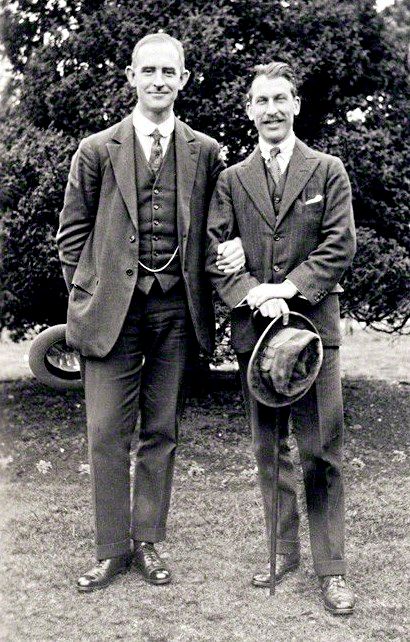
Gibbs (left), with Sir Arthur Bliss, 1923.
Source: Dutton Epoch CD (my rip!)
Format: mp3, 320k/s (CBR), DDD Stereo
File Size: 184 MB (incl. artwork & booklet)
Download Link – https://mega.co.nz/#!08cglDKT!UlUOACTb1lJK0QaMAq8C8gGGDheGftF2RpYfNER RVZ0
Enjoy! Don’t share! Buy the original! 🙂
No.541
Chan Wing-Wah, JP (simplified Chinese: 陈永华; traditional Chinese: 陳永華; born 1954, Hong Kong) is a Chinese
conductor and composer. He is professor of music at the Chinese University of Hong Kong and president of the
Composers and Authors Society of Hong Kong. He was also chairman of the Hong Kong Composers’ Guild, vice
president of the Asian Composers’ League and board member of the International Society for Contemporary Music
(ISCM). He composed over 100 works, including eight symphonies. He was awarded several times, e.g. with the
ACL Yoshiro Irino Memorial Prize, the Ten Outstanding Young Persons Award and the composition award of the
International Double Reed Society in Florida.
The Three Kingdoms is a well-known Ming dynasty novel by Luo Guanzhong which chronicles a brief
(220-280) but important part of Chinese history. There have been countless adaptations of this work, whether
as operas, films, Tv series, or musicals. Chan’s 5th Symphony is not a program work per se but reflects
the composer’s feelings when he-read the novel. It is a turbulent and dynamic work full of deft orchestral
touches. The Sixth Symphony, entitled "Re-Unification", deals with a period in the Central Kingdom when
China was divided into nine provinces – but the re-unification that Chan clearly alludes to is the one of Hong Kong
and the PR of China in 1997. Again, there is a lot of turmoil and conflict in the music.
Music Composed by Chan Wing-Wah
Played by the Voronezh State Symphony Orchestra
Conducted by Mak Ka-Lok
"Romance of the Three Kingdoms, written by Luo Guanzhong in the 14th century, is a historical novel
set amidst the turbulent years near the end of the Han Dynasty and the Three Kingdoms era of Chinese
history, starting in 169 AD and ending with the reunification of the land in 280 AD.
The story (part historical, part legend, and part myth) romanticises and dramatises the lives of feudal
lords and their retainers, who tried to replace the dwindling Han Dynasty or restore it. While the novel
follows hundreds of characters, the focus is mainly on the three power blocs that emerged from the
remnants of the Han Dynasty, and would eventually form the three states of Cao Wei, Shu Han, and
Eastern Wu. The novel deals with the plots, personal and army battles, intrigues, and struggles of
these states to achieve dominance for almost 100 years. This novel also gives readers a sense of
how the Chinese view their history through a cyclical lens. The famous opening lines of the novel
(as added by Mao Lun and his son Mao Zonggang summarise this view: It is a general truism of
this world that anything long divided will surely unite, and anything long united will surely divide
(話說天下大勢,分久必合,合久必分).
Romance of the Three Kingdoms is acclaimed as one of the Four Great Classical Novels of Chinese
literature; it has a total of 800,000 words and nearly a thousand dramatic characters
(mostly historical) in 120 chapters."
Source: Hugo Classics CD (my rip!)
Format: mp3, 320k/s (CBR), DDD Stereo
File Size: 133 MB (incl. cover & booklet)
Download Link – https://mega.co.nz/#!sgUDTb7R!TnhWLSsUifCDYMoPCUJ4n0qz5-gSaY0CjCLOEyRWnbs
Enjoy! Don’t share! Buy the originals! 🙂
Right now this minute I’m relistening to 039 – Kevin Kaska, Battle for Atlantis, The Isle, Mount Vesuvius, The Golden Falcon which, amongst others I downloaded some time back. This is an album I would never have really considered listening to let alone appreciated.
I could ramble on more, for ages, sorry about that.
As a final thought, with alternative radio, with regards to OST’s, such as Exit Music For Films, Subcity Radio, and the excellant The OST Show, being about and popular, have you never considered that with your knowledge and dedication, that you could easily satisfy that bridging nitch by hosting some radio show. What you do now must, I imagine be self satisfying, but when you consider that from others(such as me) all you get is a ‘thank you’ no matter how big, I think you’re also worthy of much more appreciation that also some radio outlet could afford you. Again, sorry for rambling on so much, but more importantly thank you for what your’re doing and providing me with. Again, many thanks.
And thanks for your kind words.
Bronisław Kazimierz Przybylski (1941-2011), composer and academic teacher was born in Lodz. He studied
theory of music with professor Franciszek Wesołowski (a degree in 1964) and composition with professor Tomasz
Kiesewetter (a degree in 1969) in the State College of Music in Lodz. He completed supplementary composition
studies with prof. Bolesław Szabelski in Katowice and prof. Roman Haubenstock ??? Ramati in Hochschule f???r Musik
und darstellende Kunst in Vienna (1975-76). Since 1963 he has been teaching in the State College of Music in Lodz ???
now renamed the Academy of Music ??? where he has been a professor and the Head of the Chair of Composition
since 1987. His compositions were presented at significant contemporary music festivals such as ???Warsaw Autumn???,
???Poznan Music Spring???, ???Musica Polonica Nova??? in Wroclaw, ???The World Days of Music??? in Tel-Aviv, ???Musikprotokoll??? in
Graz, or ???The Parisian Tribune of Composers???. They were performed in Europe, the USA, Canada, Mexico, Brazil,
Japan, the Republic of South Africa, and New Zealand.
This unique, and little-noticed collection of his orchestral works includes a.o. the Sinfonia Polacca,
the Sinfonia da Requiem, the Accordion Concerto, the Folklore Suite, and In Honor of Nicolas Kopernikus.
Music Composed by Bronislaw Przybylski
Played by the National Polish Radio Symphony & Krakow Radio Symphony
Conducted by Antoni Wit, Szymon Kawalla, Boguslaw Davidow, etc.
Source: DUX Records CDs (my rip!)
Format: mp3, 320k/s (CBR), DDD Stereo
File Size: 331 MB (incl. cover & booklet)
Download Link – https://mega.co.nz/#!0sNQFYQK!Tvecqj4wqEuZF4QhMue6VDdVPp113B2y1G0YM0E Uib8
Enjoy! Don’t share! Buy the original! 🙂
I must admit that what really drew me to the post was the prettiness of the conductor (or should that be conductoress) Anu Tali. Again, many thanks.
In our PC times you can’t even say "actress" anymore. Jennifer Lawrence is an ACTOR! 🙁
No.135 (provided by tangotreats) Dave Roylance and Bob Galvin. ‘The Tall Ships Suite’
All I can say is ‘this is brilliant’. This isn’t even film music waiting for a script. It’s any script you want to put to it.
I would go so far as to say that knowing the year is surpposed to be 1992 could limit the effect. As soon as I started listening to it, it brought to mind a cross between old ‘Sea Hawk’ Korngold and newcomer ‘Master and Commander’ Christopher Gordon. But that’s the beauty of it. It can be any ‘sea’ time period you like.
Excellent stuff. Many thanks to you both for this.
A member of the circle of Pauline Viardot, a valued friend, Camille Saint-Sa???ns (1835-1921) taught briefly
at the newly established Ecole Niedermeyer, where his pupils included Gabriel Faur???, a musician with whom
he established a close relationship. In 1871, after the disasters of the Franco-Prussian war, he was instrumental
in the foundation of the Soci???t??? Nationale de Musique, with its aim of propagating French music, Ars Gallica.
His great-aunt died in 1872 and three years later he contracted a marriage that came to an abrupt end six years
later, after the earlier death of his two sons. The death of his mother in 1888 left him alone and he spent much
of his later life travelling, accompanied by his dog and a loyal manservant. By the time of his own death in Algeria
in 1921 he had to some extent outlived his reputation at home. In France this was the age now of Les Six.
Debussy was dead, Faur??? was near the end of his life, and Stravinsky had already, some eight years earlier,
scandalized Paris with his Rite of Spring. Saint-Sa???ns continued to compose, although Ravel unkindly suggested
that in war-time he might have been more productively employed. Abroad he retained something more of his
earlier fame. Once known as the French Mendelssohn, he had written music that appealed to audiences in
much the same way as his predecessor???s, for its clarity of texture and its attractive powers of invention,
calculated to delight rather than to shock.
Javotte is a little-known ballet, recorded here in its entirety. Saint-Saens writes joyously with the
delightful Javotte theme (track 1, 3, 29 & others), dramatically concerning Javotte’s parents (track 2, 14, 25
& others), and even exotically (track 6). If you don’t mind a deliciously tuneful ballet, this music will certainly
make your purchase worth the while.
The play Parysatis, by Jane Dieulafoy, was first staged in the Arena at B???ziers in August 1902, with
incidental music by Saint-Sa???ns. Jane Henriette Magre Dieulafoy shared with her husband, Marcel-Auguste
Dieulafoy, archaeological investigations in Persia in 1881-82 and 1884-86, expeditions that led to significant
additions to the collections of the Louvre. In addition to the publications of her husband, Jane Dieulafoy wrote
a number of books, including illustrated reports of the excavations and discoveries of the French expeditions.
In France she chose to dress as a man, and after the performance of her orientalist play Parysatis, appeared
on stage, wearing her short jacket and breeches, with Saint-Sa???ns, to acknowledge the very considerable
applause of the audience, as Faur??? reported. This recording only includes the orchestral introduction and
two ballet scenes.
Music Composed by Camille Saint-Saens
Played by The Queensland Orchestra
Conducted by Andrew Mogrelia
"Although this delightful ballet’s story (a boy and girl in a provincial village find love despite psychotically
grumpy parents) practically defines the word "slender", the work itself is none the worse for that. A scant
hour of music features Saint-Saens’ typical craftsmanship, even though the 1896 date of composition might
as well have been decades earlier. You get a couple of bubbly village festivals, a spinning scene, some very
attractive and lyrical set pieces for the lovers, and it’s over almost before you realize just how lightweight
and inconsequential the whole thing really is. The incidental music to Parysatis consists of four brief
movements in the composer’s best Samson and Delilah style. I have to confess that I really enjoy this
stuff–it’s tuneful and diverting and good, clean fun. Andrew Mogrelia keeps things lively, the Queensland
Orchestra plays really well, and the sonics are terrific. What’s not to like?"
Classics Today
Source: Marco Polo CD (my rip!)
Format: mp3, 320k/s (CBR), DDD Stereo
File Size: 192 MB (incl. cover & booklet)
Download Link – https://mega.co.nz/#!R0chGbAb!Px1XKyOZbo4Qh_EvFQetzSv0or9PZa2WbaWdU0-kLrY
Enjoy! Don’t share! Buy the original! 🙂
Carl Davis (*1936) has shown particular skill in composing music for dance, with a number of ballet
scores to his credit. In 1999 he made his d???but at the BBC Proms with a concert of film music with the BBC
Concert Orchestra. The association continues with Proms in the Park. In 1992 he received an Honorary Fellowship
from Liverpool John Moores University and in 1994 he was awarded an Honorary Doctorate of Arts by his old
College ???Bard??? in New York. More recently, he was awarded an Honorary Doctorate of Music by Liverpool
University. In 2003 he received a BAFTA Special Lifetime Achievements Award for his contribution to the
worlds of film and television.
Carl Davis on Aladdin: "Some time in the mid-1990s came the dream phone call ??? Robert Cohan,
American choreographer and founder of The London Contemporary Dance Company, asking if I would be
interested in composing a score for a full length ballet on the subject of Aladdin, for what is the traditional
Nutcracker slot, Autumn and Winter. Would I? ??? You bet! ??? I enjoyed revisiting the score five years
after the first successful season by Scottish Ballet in 2000 and sincerely applaud the magnificent performance
by the new and exciting Malaysian Philharmonic Orchestra."
Music Composed and Conducted by Carl Davis
Played by the Malaysian Philharmonic Orchestra
"Listening to Carl Davis??? Aladdin, I find it hard to believe it has not already been added to the repertoire lists of
the world???s great ballet companies. It is one of the great traditional ballet scores since Spartacus and it is
blessed with a great story from The Book of One Thousand and One Nights that is both familiar and
archetypal. The score is filmic in the best sense of the word, and blessed with a memorable heroic theme,
as well as other notable leitmotifs, which swirl around, reappearing in various guises as the story moves
towards its climax. This is the entire ballet score and not an orchestral suite of the highlights???Overall the
writing flows in an unusually assured and fluent manner and the orchestration recreates the golden sound
of the MGM film soundtracks. Davis, a fine conductor as well as composer, directs the Malaysian
Philharmonic Orchestra who sound wonderful. The sheen of the strings and winds at the climaxes is
entirely satisfying and the brass really create a sense of warmth and breadth. For those who love an
epic score with sweep, grandeur and the high points in all the right places???this is a great find. Likely
to become a classic."
Limelight
Source: Naxos CDs (my rip!)
Format: mp3, 320k/s (CBR), DDD Stereo
File Size: 353 MB (incl. cover & booklet)
Download Link – https://mega.co.nz/#!s1UlULKK!NZxfcjbRSaPjFsPN6cmsz1iggoEi2btGwo5Gr5P yJDk
Enjoy! Don’t share! Buy the original! 🙂
The American composer Charles Ives (1874-1954) learned a great deal from his bandmaster father,
not least a love of the music of Bach. At the same time he was exposed to a variety of very American musical
influences, later reflected in his own idiosyncratic compositions. Ives was educated at Yale and made a career
in insurance, reserving his activities as a composer for his leisure hours. Ironically, by the time that his music
had begun to arouse interest, his own inspiration and energy as a composer had waned, so that for the last
thirty years of his life he wrote little, while his reputation grew.
When asked to define a masterpiece in music Igor Stravinsky chose Ives???s Decoration Day, a tone poem
that Ives later made the second movement of his Holidays Symphony . The remaining movements also
celebrate key American holidays with characteristic verve. The General Slocum movingly commemorates a
1904 boating disaster in which more than a thousand people lost their lives. The Overture and Postlude are early
works that nonetheless display Ives???s originality, while Yale-Princeton Football Game exuberantly depicts a legendary
1897 match.
Music Composed by Charles Ives
Played by the Malm??? Symphony Orchestra
Conducted by James Sinclair
"James Sinclair is always an excellent guide to this music, even through Ives??? most complex textural thickets.
The Fourth of July has real celebratory fervor and a sense of fun, while the climax of Thanksgiving, so often
a muddle, here achieves real transcendence, with the choir perfectly integrated into the ensemble. I have
to confess that I love this piece particularly, even though it???s often considered the weakest part of what would
later become the ???Holidays??? Symphony. I attended Hopkins Grammar in New Haven, as did Ives, and every
Christmas the Glee Club gave a concert on the New Haven green at Trinity Church, right next to Center
Church at which Ives served as organist. One of the hymns we often sang was ???Duke Street???, which forms
the climax of Thanksgiving. So it has personal resonance, and it???s also a great tune.
For this reason, and because of the similarities in tone and structure among the other three movements,
I see no reason why the movements of ???Holidays??? should not be enjoyed separately, as they are presented
here (the first, Washington???s Birthday, already has been released). Interspersed between the better-known
works are some real novelties. First, The General Slocum, a brief portrait of a tragic shipwreck, followed
by two student works that sound totally Romantic, and completely unlike Ives: the Overture in G minor,
and the Postlude in F. Finally, the Yale-Princeton Football Game, a two-minute riot of a piece that will
make any fan of (American) football smile.
As already suggested, Sinclair???s conducting gets everything right: tempos, textures, balances, and colors.
He allows Ives??? boisterous high spirits to emerge naturally, effortlessly, and where necessary, raucously.
The Malm??? orchestra plays all of this music with complete confidence, and the sonics are unaffectedly
crisp and clean. An essential release for Ives fans."
Classics Today
Source: Naxos CD (my rip!)
Format: mp3, 320k/s (CBR), DDD Stereo
File Size: 126 MB (incl. cover & booklet)
Download Link – https://mega.co.nz/#!khsglB5b!GYUsb0fp0mdtFC7E73Vofm1KLNguQZ-yPHMf5Y8nMSM
Enjoy! Don’t share! Buy the original! 🙂
And don’t forget to click on "Like" if you downloaded and enjoyed this upload! 😉
David Amram (*1930) is celebrated as one of America’s most adventurous composers. His works embrace classical,
jazz, folk, and world music traditions, transforming them into vibrant new music that reflects the eclectic energy of
the modern world. Songs of the Soul – a symphony in three movements – is a passionate affirmation of life
with all of its joys and sorrows. Shir L’erev Shabbat presents a modern setting of timeless Sabbath prayers.
The Final Ingredient, an opera originally premiered on network TV, tells the gripping story of World War II
concentration camp prisoners who struggle???and ultimately succeed???in celebrating their traditional Passover seder
under inhuman conditions.
Music Composed by David Amram
Played by the Rundfunk-Sinfonieorchester Berlin & University of Michigan Opera Symphony
With various soloists and the BBC Singers
Conducted by Christopher Wilkins & Kenneth Kiesler
"Here we have three works by Philadelphia-born composer and ???Renaissance man of American music???
(according to the Boston Globe), David Amram (b. 1930). His biography is long and colorful, and, as
always, fully documented by Neil Levin???s encyclopedic notes. In a nutshell, Amram has had a mixed
musical and cultural background, studying at the Manhattan School of Music under Vitttorio Giannini,
Gunther Schuller, and Dimitri Mitropoulos, while simultaneously becoming involved with a number of
prominent jazz musicians and ensembles. He has written a considerable amount of music, from incidental
scores to Shakespeare plays, Ibsen???s Peer Gynt, Camus???s Caligula, and plays by Eugene O???Neill and
T. S. Eliot; to the sound track for an experimental documentary film by Jack Kerouac; to a number of
well-known film scores, including Splendor in the Grass, the Manchurian Candidate, and The Young
Savages; to over 100 orchestral and chamber works. Amram???s 1987 Symphony, subtitled ???Songs of
the Soul,??? is in some respects similar to Weisgall???s T???kiatot discussed above. Programmatic movement
titles notwithstanding, it is a three-movement orchestral score that may be heard as purely abstract
music. The work reflects Amram???s interest in authentic Jewish/Oriental ethnic musical modalities.
Put that together with the composer???s film-score background, and you have a richly Romantic,
exotically perfumed work that could play well as the sound track for a Biblical docudrama.
Don???t get me wrong. This is gorgeous sounding music. I???m just trying to describe it and put it into
context so you???ll know what to expect. It is performed here by Christopher Wilkins conducting the Berlin
Rundfunk Orchestra, in co-production with German Radio and the ROC Berlin."
Fanfare
Source: Naxos "Milken Archive" CD (my rip!)
Format: mp3, 320k/s (CBR), DDD Stereo
File Size: 146 MB (incl. booklet)
Download Link – https://mega.co.nz/#!xsdlSSSL!cmswChEBqRn8qj2S2NMLv1PBvFZVj3MSvJcLNPu wEQI
Enjoy! Don’t share! Buy the original! 🙂
P.S.: My photobucket bandwidth is approaching 10GB again(!), indicating that a great many more people
are viewing (and possibly downloading) these releases than the number of "likes" seems to indicate.
One of the most popular artists in the solo instrumental and adult-alternative spheres, David Lanz (*1950)
played in several rock bands during his teens, then began developing his style as a solo pianist in a small Seattle
nightclub. He introduced some of his originals into the bar’s required mix of standards and pop tunes, receiving such
a positive response from patrons that, before long, he was playing his own material almost exclusively. His early
albums of solo piano works are still among the Narada label’s best-sellers. His two collaborative efforts with guitarist
Paul Speer also hit the Billboard Top 200 Albums chart; yet as Lanz’s national popularity grew, he began to experiment
with works for larger and larger ensembles, culminating in full orchestral accompaniments on Skyline Firedance (1990).
With 1991’s Return to the Heart, he journeyed back to his solo piano roots, and made his vocal debut on 1993’s Bridge
of Dreams. Lanz remained prolific throughout the decade.
This is actually pop music, but pianist-composer David Lanz, obviously, has higher ambitions – so he reworked
some of his solo piano works into pieces for piano and orchestra, with some helf by Don Davis.
The result is still "orchestral pop music", or new age if you will, but all of these pieces would nicely do as film music
in an urban setting.
Music Composed by David Lanz
Played by the IFS Philharmonic Orchestra (Munich)
With David Lanz (piano)
Conducted by Don Davis
"Just when you thought the folks at new age haven Narada couldn’t top 1990s Wilderness Collection and the Narada
Nutcracker in terms of musical events, along came perhaps the year’s most ambitious and exquisite instrumental
project from new age’s top star, the melodic, rhythmic super-pianist David Lanz. Having shown a mastery of the
ivories on 1988s top genre release Cristofori’s Dream, Lanz entered the new decade determined to top even
himself… what he has achieved is nothing short of a true musical miracle, a dynamic two CD (for the price of one)
set featuring the same inspiring compositions performed as solo piano pieces and then with Munich’s IFS Philharmonic
Orchestra. Similar to and influenced by David Foster’s The Symphony Sessions, this body of work cements Lanz’s
status in new age, whether he likes the title or not. The collection’s finest moments find Lanz campaigning for world
peace ("Dancing on the Berlin Wall," "The Crane") and covering the Moody Blues’ classical-rock gem "Nights in
White Satin" to near orgasmic effect on the orchestral disc. Skyline Firedance is one of his best works,
a modern musical masterpiece."
Jonathan Widran, All Music Guide
Source: Narada CDs (my rip!)
Format: mp3, 320k/s (CBR), DDD Stereo
File Sizes: 103 MB / 93 MB
Download Link (orchestral) – https://mega.co.nz/#!st0UBTKR!cn1jbwaFJZcz2TYokii9IVt0MZAjxXNWGfgc29q ZaPM
Piano Solo CD – https://mega.co.nz/#!B5M1SCST!SAVKTRriA2svw2vh-Hgo8Vw9Kmg88hyNBgDryt9gx3M
Enjoy! Don’t share! Buy the original! 🙂
The Sonata da Chiesa (Church Sonata) by Adolphus Hailstork (*1941) reflects the composer’s fascination
with cathedrals, particularly the Cathedral of All Saints in Albany, New York where he was a chorister as a child. The
titles of the movements, which reflect the mood of the music, are as follows: Exaltation, O Great Mystery, Adoration,
Jubilation, O Lamb Of God, Grant Us Thy Peace, Exaltation.
Jiri Gemrot’s American Overture was written for Paul Freeman and the CNSO and premiered in
Prague in 1996. Gemrot’s language utilizes twentieth century elements, though it is his aim to fuse styles uniting past
and present. His music might best be described as being aligned with neoclassicism. In his compositions, as in the
American Overture, he often employs sonata form in an unconventional manner, regarding it as a principle of
evolution and contrast.
The Symphony for String Orchestra by Richard Felciano (*1930) was composed for the Orquestra Filamonica
de la Cuidad de Mexico, which gave the premiere performance in February 1994. The work is based on the slow
unfolding, over three movements, of a single harmony, the four central pitches of which are identical to those of a
melody from the slow movement of Mozart’s A Major Piano Concerto, a melody which emerges in canon in the second
movement as well. The core of the third movement, in which the strings imitate drums, is based on African rhythms.
The Overture Celebration by Mark Petering is taken from a larger work (the finale of his First Symphony).
The composer uses the tone palette of the orchestra as an artist would in making bold splashes of color in a painting.
The work was commissioned by the PieperPower Foundation.
David N. Baker: "Images of Childhood is one of only a handful of compositions I have written in the last 20
years which was not written on commission. I thought it would be fun to write a piece about my memories of growing
up in the Indianapolis of the late 1930s and early 1940s, and Images of Childhood was the result. As with most of my
music, while the titles of the work and its movements are programmatic, there was no attempt to connect them to
specific events, people, or things; rather, the piece was inspired and driven by fleeting memories, shifting impressions
and the nostalgia of carefree times, childhood friends, and a nurturing environment. The listener is encouraged to
engage in his or her own reveries.
Music by (see above)
Played by the Czech National Symphony Orchestra
Conducted by Paul Freeman
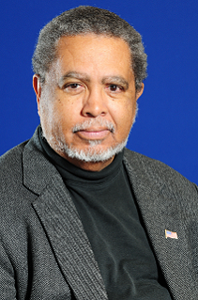 http://i1084.photobucket.com/albums/j415/wimpel69/felciaNO_zpsf6f5f16d.gif
http://i1084.photobucket.com/albums/j415/wimpel69/felciaNO_zpsf6f5f16d.gif 
Adolphus Hailstork, Richard Felciano, David N. Baker.
Source: Albany Records CD (my rip!)
Format: mp3, 320k/s (CBR), DDD Stereo
File Size: 152 MB (incl. cover & liner notes)
Download Link – https://mega.co.nz/#!ZhVw2SCR!Idvi2kGKqiSoVCnI1tcc11Pn9kNV4hf89pgRroy bLeM
Enjoy! Don’t share! Buy the original! 🙂
And don’t forget to click on "Like" if you downloaded and enjoyed this upload! 😉
For Dmitri Shostakovich the six years which span this recording (1931 ??? 1937) were a period of almost incredible
change and upheaval. It was at this time that the young man faced his first serious political difficulties which culminated
in the terrors of 1936. In 1930, the composer met the celebrated vaudeville and pioneer jazz-performer Leonid Utiosov,
an astonishing talent who introduced Shostakovich to the world of the theatre. Hypothetically Murdered was written
in 1931 to open the Music Hall???s new season. After its initial run, the show was not revived and at some point, probably
during the siege of Leningrad, the full-score, parts and libretto disappeared, leaving only a folder with around 40 pages
of detailed piano sketches with instrumental indications. The Orchestral Suite Op. 31a, given its world premiere recording
on this disc, consists of all the complete surviving orchestral numbers from the folder of sketches, reorchestrated from t
he composers scribbled notes, and in the style of his surviving theatre music from the period.
Nearly six years after Hypotheically Murdered, Shostakovich finished his Four Romances on Poems by Pushkin Op. 46.
By this time the composer, and his messages, have profoundly changed. These Romances are music of mature seriousness, and
dark with sorrow set against the literary work of the greatest and most humane of all Russian writers. After finishing the
Romances, Shostakovich went on to create the Fifth Symphony, using motifs and fragments from the first poem ??? Rebirth.
Thus he was able to hide the words of Pushkin???s passionate poem, a declaration to the power of art to survive barbarism and
oppression, beneath the musical argument of his symphonic finale.
The fascinating and rarely performed Five Fragments, written in a single sitting in July 1935, are one of Shostakovich???s last
experimental works. They prepare the ground for the composition of the massive Fourth Symphony, just as the Romances do for the Fifth.
The popular Suite for Jazz Orchestra No. 1 was written early in 1934. This delightful highly ironic music is a continuation of the
spirit of laughter and adventure that had earlier led Shostakovich to work with the great Utiosov on Hypothetically Murdered. As with
most ???Soviet Jazz??? of the period there is not much jazz here, more of a feeling of operetta and cabaret music and also of Jewish songs.
Despite such jollity there is always an undertone of depth and darkness, of real sadness and foreboding underlying the sentimentality
and parody.
Music Composed by Dmitri Shostakovich
Played by the City of Birmingham Symphony Orchestra
With Dmitri Kharitonov (baritone)
Conducted by Mark Elder
"Back in the first Shostakovich boom years of the late ’80s and early ’90s, just about everything Shostakovich
ever composed was recorded. One of the more interesting and challenging recordings was the previous incarnation
of this disc by Mark Elder and the City of Birmingham Symphony Orchestra with the world premiere of the
orchestral suite from Shostakovich’s musical comedy Hypothetically Murdered. Interesting because everyone
in the first boom years wanted to hear anything new by the Soviet master and challenging because Hypothetically
Murdered is no Symphony No. 5. Indeed, full of sleazy dances and sultry songs without words, it is more music
hall than concert hall and many avid fans felt that here, perhaps, was a Shostakovich disc one could pass on.
Not so: as Elder and the City of Birmingham players proved, sleazy Shostakovich is just as compelling as symphonic
Shostakovich, albeit in an entirely different way. Although more sequence than series, the numbers are self-
contained but the tone and interpretation of the performance expresses the music’s cogency. More to the point,
Elder and the City of Birmingham play Hypothetically Murdered like it was the background music for a Soviet
Cabaret, but with lots more sex and irony. While the rest of the performances on this disc vary from the fabulous –
bass Dimitri Kharitonov’s passionate singing of the blunt and bitter Pushkin Romances (4) — to the flat — the City
of Birmingham’s awkward playing of the slinky and sexy Jazz Suite No. 1 — anyone who loves Shostakovich will
love Hypothetically Murdered."
All Music
Source: Signum Classics CD (my rip!)
Format: mp3, 320k/s (CBR), DDD Stereo
File Size: 171 MB (incl. cover & booklet)
Download Link – https://mega.co.nz/#!k09mRSjb!IORHaHSnZTOWgPf6pzczuUrirDVoS6kPllGZmO4 pB7Q
Enjoy! Don’t share! Buy the original! 🙂
"The music of Don Gillis (1912-1978) is really "cross-over" music – music that can indeed make the interested
listener cross-over to our side of the street where those of us are found who enjoy "serious" classical music. Real "cross-
over" classical music is music that can be enjoyed by all who love serious music. There ARE many sides to classical
music: Schoenberg and Charles Wuorinen are one side, Beethoven and Brahms are another and Don Gillis is another.
They ALL can be loved by the serious listener! American Light represents music by composers who are legitimate
composers of lighter music or music that will appeal immediately to a larger audience. Don Gillis knew the craft. He could
make an orchestra sound as good as anyone. Toscanini knew this. This is why he hired him as the arranger for his NBC
Orchestra. He could create memorable tunes with the best of them; tunes that would stick with you in your mind; tunes
you would want to hear over and over again. And Gillis had his own unique character more so than so many other composers.
You hear a piece of music by Gillis, you know it is by Gillis from almost the first measure. Happily, here is music that is
infectious, music that truly belongs to the "cross-over" genre in the best sense of the word."
Music Composed by Don Gillis
Played by the Sinfonia Varsovia
Conducted by Ian Hobson
"You have to hear this! In their brilliant sequel to Albany???s first volume of Don Gillis symphonies and orchestral
music, Ian Hobson and the Sinfonia Varsovia confirm the tremendously enjoyable impression made by that initial
issue. To recapitulate briefly, Gillis was both a composer and the administrator in charge of the NBC Symphony
(later the Symphony of the Air). Toscanini was a friend and admirer of his music, and the Maestro actually
conducted a performance of Gillis??? Symphony No. 5 1/2. Stylistically Gillis offers touches of Gershwin and Big
Band???with, as he himself put it, influences of Debussy, Sibelius, and Strauss. The music is entirely up-tempo,
catchy, tuneful, brilliantly scored, and tirelessly entertaining.
Star-Spangled Symphony actually is Gillis??? Ninth (of at least 11), and it???s one of his largest works in the form.
Its second movement, Prayer and Hymn for a Solemn Occasion, has a touching lyricism unique in American
symphonic music, while the raucous finale is Sousa on steroids. Amarillo???A Symphony Celebration begins in
a Coplandesque mode and takes shape as a spacious rondo with colorful episodes inspired by the town of the
title. A Dance Symphony (Symphony No. 8) pleased Toscanini particularly, and it???s no wonder. Its scherzo,
called ???Waltz (of sorts)???, is hilarious, and the final Low Down Hoe-Down has enough energy to power a small city.
It sounds like the Sinfonia Varsovia had a blast making this recording. While not as brilliant in the brass as
the Albany Symphony, this orchestra plays with all of the necessary panache, and its experience with complex
contemporary music under Penderecki means that Gillis??? typically syncopated rhythms and percussion
fusillades hold no terrors. Hobson offers unfailingly lively tempos and keeps the tunes coming at you with the
necessary heedless abandon, while Albany provides a recording that combines excellent clarity with warmth
that precludes any hint of shrillness or stridency. Gillis is an American original; don???t let the fact that this is
???light music??? dissuade you of its real greatness. Keep it coming, Albany!"
Classics Today
Source: Albany Records CD (my rip!)
Format: mp3, 320k/s (CBR), DDD Stereo
File Size: 172 MB (incl. cover & booklet)
Download Link – https://mega.co.nz/#!8x1jELJb!Jj1aAyY3L8UlKfqfeApitHGQWUwfWT25Iga_zgv pEMc
Enjoy! Don’t share! Buy the original! 🙂
And don’t forget to click on "Like" if you downloaded and enjoyed this upload! 😉
Edward Kennedy ???Duke??? Ellington wrote some of the twentieth century???s greatest Big Band music, but
he also wrote in a variety of forms. His contributions to the jazz genre are many. His bands in the ???20s and
???30s introduced ???jungle music??? which incorporated African influences. Ellington was more conscious of musical
form than his predecessors. He thought in orchestral terms, using the band as his instrument. He wrote
specifically for his musicians, drawing on their talents as soloists and ensemble players to create the ???Ellington
effect,??? so-called by Billy Strayhorn. He used instruments in unusual roles within the band and rarely soloed
on piano, preferring the role of arranger. Because Ellington was forward looking musically he was able to
keep his band together until his death when his son Mercer took over. Many of its members were with him
for three decades.
The boisterous and evocative Harlem pays tribute to Ellington???s roots, Black, Brown, and Beige
sets work songs and spirituals, whilst the suite from The River shows his genius in writing for the stage.
Three Black Kings, scored as a ballet, was left unfinished at his death, but shows no lessening of invention.
Ellington???s arrangement of Billy Strayhorn???s Take the ???A??? Train became famous around the world
after the outbreak of World War II, and ranks among the most widely recorded standards of all time.
Music Composed by Duke Ellington
Played by the Buffalo Philharmonic Orchestra
Conducted by JoAnn Falletta
"What with the dodgy availability of Mauric Peress??? benchmark Musicmasters Ellington recordings, we badly
needed a top-notch survey of Ellington???s orchestral music, and this inspiring disc fits the bill perfectly. Indeed,
I would go so far as to say that Falletta and the Buffalo Philharmonic have yet to make a finer record.
The performances are just marvelous. JoAnn Falletta catches the music???s ???swing??? in vivid interpretations that
challenge Peress in their vitality, color, and verve. The various instrumental soloists, especially Sal Andolina???s
clarinet in Three Black Kings and Tony Di Lorenzo on trumpet in Take the ???A??? Train (and elsewhere), are all
brilliant, and captured by Naxos??? engineers in bright, natural, high-impact sound. This is a very necessary
release, but one that should get a lot of play as well. It???s a joy."
Classics Today http://i1084.photobucket.com/albums/j415/wimpel69/p10s10_zps7fad6187.gif
Source: Naxos CD (my rip!)
Format: mp3, 320k/s (CBR), DDD Stereo
File Size: 189 MB (incl. cover & booklet)
Download Link – https://mega.co.nz/#!A0s1xTzB!Kkh_9XCNo3FsaW6HtcS3eXq5wBBMZQujd7bNkoM nsOg
Enjoy! Don’t share! Buy the original! 🙂
And don’t forget to click on "Like" if you downloaded and enjoyed this upload! 😉
David Ward-Steinman (born November 6, 1936) is an American composer and music professor. He is the author
of Toward a Comparative Structural Theory of the Arts, and co-authored Comparative Anthology of Musical Forms.
Ward-Steinman is currently dividing his time between San Diego State University and Indiana University in Bloomington.
He was formerly Composer-in-Residence and Professor of Music at San Diego State, and is now Distinguished Professor of
Music Emeritus there, and also an Adjunct Professor of Music at Indiana, where he teaches in the spring.
Ward-Steinman studied at Florida State University and the University of Illinois, where he received the Kinley Memorial
Fellowship for foreign study. After receiving his doctorate, he was a fellow at Princeton University from 1970. His teachers
included John Boda, Burrill Phillips, Darius Milhaud (at Aspen, Colorado), Milton Babbitt (at Tanglewood) and Nadia Boulanger.
Music Composed by David Ward-Steinman
Played by the San Diego Ballet Chamber Orchestra and San Diego Ensemble
And the Moravian Philharmonic Orchestra
Conducted by Donald Barra, David Ward-Steinman & David Amos
"This latest CD devoted to the art of David Ward-Steinman begins with Elegy for Astronauts, a work inspired by the
Challenger disaster of 1986, and an event that inspired several composers to write works commemorating these heroes
of space exploration. Ward-Steinman’s contribution to these memorials begins with a rather violent and turbulent beginning,
rather evocative of the explosion of the ill-fated Challenger about a minute into its flight. An electronic episode takes over
from the orchestra shortly into the piece, creating an eerie ambience. After this initial outburst, the piece takes a decidedly
more tranquil and tonal turn, and ends quietly with an affirming and peaceful D-Major sonority.
Moir??? is scored for solo piano and chamber ensemble consisting of flute, clarinet, bassoon, alto saxophone, trumpet,
trombone, and percussion. It is a boisterous, highly rhythmic work, full of vitality and life. The title is a French word that
refers to the interference patterns that one sees in overlapping grids of parallel lines. This phenomenon is sometimes
encountered on silk or other fabrics. Ward-Steinman has applied the principle to music by utilizing overlapping irregular
accompanimental patterns, over which the piano plays its lines. The “musical interference patterns” that result are a
fascinating aural experience. This is Minimalist music for those, such as this reviewer, who don’t like Minimalism. I like
very much this piece!
I suspect the free improvisation that is included in this CD was done as a novelty, as few recitals include such things.
The improvisational skills of clarinetist James Campbell and Ward-Steinman on the piano are such that the resulting
work was well worth preserving on the present disc. Indeed, were it to be transcribed (a most tedious process, I can
assure you, having attempted it for one of my own recorded improvisations) and published, I have no doubt that other
performers would take it up. The piece is, not surprisingly, free of any but the barest hints of tonality, but there is
plenty of variety in texture, mood, dynamics, phrasing, and special effects such as multiphonics on the clarinet and
inside-the-piano effects from Ward-Steinman, and bears up well under repeated hearings. Obviously, Campbell deserves
credit as co-composer of the work.
The Tale of Issoumbochi, (the approximate Japanese equivalent of “Tom Thumb”), is scored for narrator, soprano,
and chamber ensemble of five players. The charming story of Issoumbochi’s adventures is skillfully narrated by
Jonathan McMurtry, and is given voice by soprano Richelle Triglia. Triglia’s voice, though warm and pleasant, seems
a bit too rich for the size of the fellow she is portraying, but that’s a very minor quibble. Ward-Steinman’s use of
his accompanying forces is imaginative and colorful, skillfully exploiting the limited tonal resources available to him.
The tonality in the work is rather free, and complements the narration very well. Play this work for any child you know,
young or old, and see if you do not get a positive reaction!
Western Orpheus is a ballet commissioned by the San Diego Ballet for the opening of the San Diego Civic Theater.
Originally written in 1965, the work was expanded and re-choreographed in 1987, and it is this latter version
from which the concert suite presented here has been extracted. Its movements include “Prelude,” “Limbo-Apollo,”
“Earth-Wedding Celebration,” “Duo: Orpheus and Eurydice,” “Pas de deux,” “Hades-Bacchanal,” and “Apotheosis
and Coda.” That’s about all I can tell you about the plot, given that there is no synopsis provided, but it would
seem safe to assume that the story is some variant of the ancient Greek legend.
The style of the music is richly and dramatically chromatic, and features a prominent solo violin part (beautifully
executed by Nicholas Grant), the lines of which wander about in improvisatory fashion. While freely tonal, the
chordal structure of this ballet is complex, diffuse and hard to pin down in specific key areas. Certain of the chords
and rhythms owe something (as does much contemporary music) to The Rite of Spring. Ward-Steinman makes skillful
use of harp and piano interjections (some of which are played inside the piano), to propel the momentum forward in
unexpected directions, but there are also tender sections of quietude that provide contrast and equipoise.
The performances and recorded sound on this Fleur de Son release are exemplary, and must have provided the
composer great satisfaction. Ward-Steinman is a versatile composer who has written deeply moving music in a
variety of styles and genres; his is music well worth exploring by any music lover who is attracted to the music
of our era, and is most heartily recommended."
Fanfare
Source: Fleur de Son CD (my rip!)
Format: mp3, 320k/s (CBR), DDD Stereo
File Size: 155 MB (incl. cover & composer bio)
Download Link – https://mega.co.nz/#!B8tmTaAA!RxAwazhMYh6cyxom4HLLHx7TylIN4zZxs38cobd b4lI
Enjoy! Don’t share! Buy the original! 🙂
And please click on "Like" if you downloaded and enjoyed this release. 😉
Eivind Groven (1901-1977) was born in L???rdal in western Telemark, a part of Norway rich in folk-music traditions.
He was a composer and musicologist, as well as being highly skilled at playing both the Hardanger fiddle and the willow
flute. Groven completed his teaching degree in 1923, after which he taught for a short period of time. In the autumn of
1925 he studied counterpoint at the Oslo Conservatory of Music. His research in the fields of folk music and acoustics
also had a strong influence on his compositional technique. A number of his works have become part of the standard
repertoire of contemporary Norwegian music. The overture Hjalarljod in particular, commissioned for the 900th
anniversary of the city of Oslo, has achieved wide-spread popularity.
When the Norwegian Broadcasting Corporation (NRK) arranged a competition for symphonic music in 1937, Groven
submitted his Symphony No.1, a large-scale, wide-ranging and untraditional orchestral work that won the second prize.
It was not until ten years later that the work was first performed in public; in New York. The slow movement opens with a
famous solo for the tuba. "Moods from the mountains of Norway" from another work by Groven, Driftekaren ,
to a text by Hans Kinck, gave rise to the title Innover viddene (Towards the Mountains).
Symfoniske Sl???ttar nr.1 (Norwegian Symphonic Dances No.1) are largely based on material from the first
symphony. The first movement is a newly composed and strongly contrasted bridal march (bruresl???tt) from 1950.
This is followed by a dance (a springar) that is borrowed from the symphony. And finally there is a re worked
version of another type of folk tune (a gangar) taken from the symphony.
Faldafeykir (from Old Norse: ???flying head-dresses???), Symfoniske Sl???ttar nr.2 (Norwegian Symphonic Dances No.2),
was Groven???s contribution to a com petition in 1965 organized in connection with the 200th anniversary of the Bergen
Philharmonic Orchestra. It was given its first performance in 1967. The first move ment is based on a rarely-heard
springar with a very peculiar tonality. The slow second movement uses Groven???s own musical materials while the third
movement is built up on a very fine arrange ment of Sevlien (a halling). Falda feykir was Groven???s last
major composition.
Music Composed by Eivind Groven
Played by the Stavanger Symphony Orchestra
Conducted by Eivind Aadland
"Eivind Groven (1901-70) was an oddity among Norwegian composers. He spent most of his life
obsessing about the best chordal structures that would carry the sonority of just intonation into
the standard, tempered system of modern tuning, thus reproducing the true sound of folk music
more authentically. As with most composers who aren???t geniuses and who adopt a restrictive
harmonic system, the results have a limited emotional range, but the music is nevertheless
curiously compelling: fresh, soulful, and, well, folk-like. Think of a mixture of Vaughan Williams
in his pastoral style, but with Copland???s feeling for sonority and that ???open air??? quality to the
orchestration. If you like those composers, you???re sure to enjoy Groven.
The Hjalarljod Overture was previously released in a collection of Norwegian orchestral favorites,
but the remaining items are receiving their first releases by a major label. Groven???s First Symphony
actually had its premiere in New York. Its four movements show a non-traditional slow-fast-slow-
fast approach to form, and have plenty of character otherwise. Of the two remaining works, both
based on Norwegian folk dances arranged in single-movement, rhapsodic form (like Bart???k???s
Dance Suite), the first actually borrows from the symphony. Groven apparently spent a good
bit of time working out solutions to his harmonization theories by reusing the same material,
but the results are sufficiently different to make the outcome interesting and certainly never
dull. The performances are very sincere, not to mention well recorded, and are as freshly
pointed as the music itself. Curious, quirky, but ultimately very enjoyable!"
Classics Today
Source: BIS Records CD (my rip!)
Format: mp3, 320k/s (CBR), DDD Stereo
File Size: 168 MB (incl. cover & booklet)
Download Link – https://mega.co.nz/#!NxV0AYwC!u7OSxN9rjs8ICK-NTUd-Qw2bDX6xUYUG0-VFbsjQVe4
Enjoy! Don’t share! Buy the original! 🙂
And please click on "Like" if you download and enjoyed this release! 😉
Brazil made a big impression on Darius Milhaud (1892-1974). He soaked up the sounds of that huge South
American country, especially the popular music with its infectious melodies and rhythms played
on exotic instruments with intriguing new timbres. Milhaud spent less than two years in Brazil and left to return
to France in November 1918. But the sounds of Brazil were to stay with him the rest of his life and heavily
influenced several major works. Two of those works are recorded here: his Saudades do Brazil and his
Scaramouche. Both works are filled to the brim with the sensual rhythms and playful melodies that
Milhaud had grown so fond of during his two years in Brazil.
In 1921, Milhaud wrote his Brazilian-inspired Saudades do Brazil. The original score is a suite
of short pieces for solo piano. The Portuguese word ???saudades??? means longing or nostalgia…
longing in the sense of longing for things past but also things dreamed of or desired. So these
short pieces are Milhaud???s nostalgic reminiscences of his time in Brazil. Each title is the name
of a part of Rio de Janiero that Milhaud had got to know during the two years he spent there.
Milhaud created the orchestral versions of his ???saudades??? in the late 1930???s.
Milhaud???s Scaramouche is better-known than the Saudades, probably because of the many
different arrangements that exist of its three short movements. There are versions for various
solo instruments and piano plus the popular arrangement for two pianos. But the version
recorded here is Milhaud???s original composition for alto saxophone and orchestra.
Someone once wrote that Heitor Villa-Lobos (1887-1959) was a man ???fond of black cigars and
even blacker coffee???. That is not a surprising description for a man who seems to have had a limitless
zest for life and an unflinching belief in the value of his art.
In the 1930???s, Villa-Lobos got an opportunity to put this philosophy of composition and his
many hours of playing cello for silent movies to very good use. The Brazilian film director
Humberto Mauro was asked to direct a movie called Descombrimento do Brazil (The Discovery
of Brazil). It was a movie that described the historical origins of Brazilian culture and the early
encounters between European explorers and Brazil???s indigenous peoples. It turned out to be a
rather idealized and heroic account of Brazil???s discovery by the Portuguese explorer Pedro Cabral.
When Humberto Mauro had completed his film, he showed it to Villa-Lobos, who agreed to
write a score for this quasi-documentary. Villa-Lobos??? score is a kind of summary of Brazil???s
musical roots … Indian song and the sounds of the rain forests intermingle with melodies from
Spain and Portugal.
Music by Darius Milhaud & Heitor Villa-Lobos
Played by the Calgary Philharmonic Orchestra
With Jeremy Brown (saxophone)
Conducted by Hans Graf
"Another imaginative and original programming effort here. Both of these composers
were strongly influenced by the exotic sounds of Brazil – Villa-Lobos because he
was born there, and Milhaud because he spent two years there during the First World War.
Saudades means nostalgia, so Milhaud is dreaming of his time in Brazil. The exciting
musical culture of Brazil is filtered thru French ears in the swinging Scaramouche Suite
– normally heard in a two-piano version. The two Villa-Lobos suites are derived from
his soundtrack music to a Brazilian quasi-documentary on the country???s early history.
This provincial Canadian orchestra might seem ill-equipped for such colorful Brazilian
scores, but they do a bang-up job."
Audiophie Audition
Source: CBC Records (my rip!)
Format: mp3, 320k/s (CBR), DDD Stereo
File Size: 161 MB (incl. cover & booklet)
Download Link – https://mega.co.nz/#!ZssF0ZiL!Pyr-Kl_JP_QEWkeEa5yAOhlnFQRaW7YUNYsBzRUzNvM
Enjoy! Don’t share! Buy the original! 🙂
And please click on "Like" if you download and enjoyed this release! 😉
David Diamond???s (1915-2005) ballet TOM had to endure a difficult and confusing gestation period that
could have profited from a printed cast of characters. In 1935, the twenty-year-old composer was still a student of
Roger Sessions but was nonetheless approached by the writer Cary Ross to compose music for TOM, e.e. cummings???s
scenario for a ???ballet in four episodes??? based on the famous antislavery novel, Uncle Tom???s Cabin by Harriet Beecher
Stowe, among the most influential writings in American history. Ballet impresario Lincoln Kirstein had asked
cummings to produce the scenario in 1933, and approached Stravinsky, Virgil Thomson and Paul Bowles to provide
the music. Each composer turned down the request. On top of that series of rejections, George Balanchine, who was
to choreograph the proposed work, begged off, as did Kirstein, effectively leaving the project up in the air. Diamond
wrote to cummings and asked for permission to go ahead with the composition. The poet acceded to Diamond???s
request and suggested that the composer go to Paris to discuss the project with L???onide Massine, newly chosen as
choreographer. Disagreements ensued and ultimately TOM was never performed as a ballet.
In twelve sections that relate to both action and character portrayals of the protagonists, one could easily
take many of the American-sounding tunes to be part of the heritage of our country???s folk-music, yet Diamond
had fashioned them all from his fertile imagination. Like Dvofi???k, Tchaikovsky and Bart???k in their respective
homelands, Diamond thoroughly absorbed the ???language??? of our culture (the composer referred to this
process as ???osmosis???), and the homespun melodies sound utterly natural and folk-like.
This Sacred Ground relates as well to our nation???s still-resonating encounter with the institution of
slavery. The eminent conductor Josef Krips had expressed a wish that Lincoln???s ???Gettysburg Address??? be
set to music. As a student in Vienna years earlier, Krips had memorized the justly famed speech and continued to
be inspired by its ringing truths and great humanity. During his tenure as conductor of the Buffalo Symphony,
he arranged for the Buffalo Evening News and radio station WBEN to co-commission the score, which
received its premi???re under Lukas Foss and the Buffalo Symphony on 17th November, 1963. Diamond dedicated
his new work to Krips, who was unavailable to lead the premi???re because of scheduled duties with his new
orchestra, the San Francisco Symphony (with whom he eventually conducted This Sacred Ground).
The work is scored for mixed chorus, children???s chorus, baritone solo and orchestra.
Diamond dedicated his Symphony No.8 to his friend and mentor, composer Aaron Copland on the occasion of
his sixtieth birthday. The work was completed in November 1960 and received its premi???re with Leonard
Bernstein and the New York Philharmonic on 27th October, 1961. While essentially tonal in harmonic
language, Diamond incorporated highly chromatic elements and even a twelve-note tone row, not unlike
what the Symphony???s dedicatee was doing during this same period in his Connotations, though Diamond???s
work is far less aggressively dissonant in overall sound.
Music Composed by David Diamond
Played by The Seattle Symphony
Conducted by Gerard Schwarz
"The First Suite from the Ballet, Tom inhabits much the same musical world as Aaron Copland. The
Eight Symphony makes use of serial technique but will still present few problems to those familiar with
Diamond???s earlier music, for it remains lyrical and though-provoking. It culminates in a double fugue of
considerable ingenuity. This Sacred Ground is a short setting for soloist, choirs and orchestra of the
Gettysburg Address, and it may not travel so well. Committed performances and excellent, natural,
recorded sound."
Penguin Classical Guide
Source: Delos CD (later, Naxos) (my rip!)
Format: mp3, 320k/s (CBR), DDD Stereo
File Size: 158 MB (incl. Naxos cover & booklet)
Download Link – https://mega.co.nz/#!oocGBYYD!H4q9HidN-7UfSgWjvYqpyGnZ0nwoL4UUP877i9WDbZ4
Enjoy! Don’t share! Buy the original! 🙂
And please click on "Like" if you download and enjoyed this release! 😉
Thanks for sharing, wimpel!
A collection of several orchestral works by French late-romantic composer Gabriel Piern???,
including the light (Viennoises) and deeply-felt works (Paysages, Images).
Music Composed by Gabriel Piern???
Played by the Orchestre Philharmonique des Pays de la Loire
Conducted by Pierre Dervaux
"Even as critics and the public were beginning to complain that the elusive French style was waning,
Pierre Dervaux was leading performances of grace, elegance, and meticulous detail. By his early 30s,
the conductor/composer had demonstrated the ability to get the best from his musicians and singers
while infusing works with compelling urgency. Dervaux presided over the premiere recording of one of
the twentieth century’s most enduring operas and was an accomplished composer in his own right. As
a pedagogue at Montreal’s Conservatory, the ???cole Normale in Paris, and the summer academy at Nice,
he exerted a positive influence on a succeeding generation of conductors. Dervaux’s training was
thorough: at the Paris Conservatoire, he studied counterpoint and harmony with Marcel Samuel-Rousseau
and Jean and No???l Gallon and piano with Isidor Philipp, Armand Fert???, and Yves Nat. He began his career
as an assistant conductor at the Op???ra-Comique in Paris in 1945. His podium debut, however, took place
with the Orchestre Pasdeloup in 1947, an occasion that won the young conductor considerable recognition.
Subsequently, he was appointed vice president of the Concerts Pasdeloup and remained in that position
until 1955. Meanwhile, the same year he first appeared as a full conductor, Dervaux was engaged as
principal conductor by the Op???ra de Paris, where he continued until 1970. During this time, Dervaux
was entrusted with the June 21, 1957, Paris premiere of Poulenc’s Dialogues des Carm???lites. The
following January, Dervaux conducted the first recording, a standard-setting studio performance with
Denise Duval, R???gine Crespin, and Rita Gorr. In 1968, Dervaux was engaged as musical director of
Qu???bec’s Orchestre Symphonique and remained there until 1971, when he was appointed music
director of the Orchestre Philharmonique de Pays de Loire. In 1978, coinciding with his teaching at
the Nice Academy, he began a four-year engagement as music director of the Nice Op???ra. During his
career, Dervaux appeared as guest conductor with many orchestras in other parts of Europe, in America,
and the Far East, but always devoted himself primarily to those institutions with which he was engaged.
His compositions include several concertos, two symphonies, and various chamber and solo piano works."
All Music
Source: EMI France CD (my rip!)
Format: mp3, 320k/s (CBR), ADD Stereo
File Size: 124 MB
Download Link – https://mega.co.nz/#!RpkkyRqQ!epXs5U6ctzTstOAaGCbPOnyKnONZz8dNoJrUW0a 1318
Enjoy! Don’t share! Buy the original! 🙂
And please click on "Like" if you download and enjoyed this release! 😉
The Ballet m???canique is George Antheil’s (1900-1959) most famous—or notorious—piece. At its various
premieres, it caused tremendous controversy, not to mention fistfights. Although it was very successful in Paris, it was a
huge flop when it came to New York, and in fact Antheil’s career as a "serious" composer never recovered from that debacle.
The piece was originally supposed to be a soundtrack to a film of the same name by the French Dadaist painter Fernand
L???ger and cinematographer Dudley Murphy. But Antheil and the filmmakers worked separately from each other, and when
they finally put the music and the film together, they realized they didn’t work at all — for one thing, the music was twice
as long as the film. A new version of the film, with—finally—Antheil’s music, had its premiere on May 5, 2001.
The Ballet m???canique is a highly rhythmic, often brutalistic piece combining, among other elements, sounds of the
industrial age, atonal music, and jazz. Its instrumental parts are extremely difficult to play, and it lasts, in its various versions,
between 14 and 30 minutes. Antheil wrote several versions of the piece. The very first, written in 1924 calls for 16 player
pianos playing four separate parts, for four bass drums, three xylophones, a tam-tam, seven electric bells, a siren, and
three different-sized airplane propellors (high wood, low wood, and metal), as well as two human-played pianos.
In response to the technical difficulties, Antheil quickly re-arranged the piano parts, changing the orchestration to include
unspecified multiple of two conventional pianos and a single player piano. This version was performed, using 10 human-
played pianos, in Paris in 1926 and in an extremely ill-fated concert at New York’s Carnegie Hall in 1927, where it created
such a fiasco–technically, musically, and sociologically–that it was not performed again for over 60 years. The 1927
concert at Carnegie Hall was re-created for this recording under Maurice Peress.
You can find a video of L???ger’s film, with Antheil’s music, here (http://www.youtube.com/watch?v=H_bboH9p1Ys).
And don’t anyone dare(!) tell me that Hans Zimmer and his evil minions compose "modern" film music!
Music Composed by George Antheil
Played by the New Palais Royale Orchestra
With the Mendelssohn String Quartet
Conducted by Maurice Peress
"The 1927 concert of George Antheil’s music at Carnegie Hall, hyped by the New York press to a degree that
seems unimaginable today ("Ballet M???canique to Din Ears of New York — Makes Boiler Factory Seem as Quiet as
Rural Churchyard"), was something of a fiasco. The audience responded to the airplane propellers in Ballet
m???canique by throwing paper airplanes in the hall, and critic Deems Taylor famously hoisted a white flag on
the end of a walking stick. Yet both Copland and Virgil Thomson considered Antheil a genius, and the memory
of the concert never quite went away. Antheil made a new version of Ballet m???canique in the 1950s, losing
the player piano parts and some of the electric bells, but keeping the airplane propellers and siren. Even the
1927 concert had backed off on some of the work’s original specifications, which called for 16 player pianos.
That version finally received its "world premiere" in 1999 in a computer realization at the University of
Massachusetts, but the way was paved for it by the re-creation of the entire 1927 concert in 1990 by
conductor Maurice Peress and his New Palais Royale Orchestra & Percussion Ensemble. That recording
unfortunately disappeared with the demise of the MusicMasters label, and the Nimbus label has done a
service by reissuing it. Several things may strike the listener familiar with the later Ballet m???canique.
That work itself is an altogether noisier, bigger, and more effective thing than the 1950s revision, and
you wonder whether the work might have failed at its premiere simply because it was imperfectly
realized. Antheil condensed the music in the later version, and the climax of Roll Three, with all the
pianos joining in with the siren and percussion, will make you jump out of your seat here. The rest
of the music is also worth a revival, and now that several of the pieces have shown up on recordings
multiple times it’s time for concert performers to follow suit. A Jazz Symphony, of 1925, was
originally composed for a planned-but-never-realized Second Experiment in Modern Music concert
involving jazz bandleader Paul Whiteman, intended as a successor to the event that gave the
world Rhapsody in Blue. Antheil clearly had Gershwin in mind with his jazz symphony and even
includes a solo piano in the orchestration, but the work sounds nothing like Rhapsody in Blue, or
any other work of the period, for that matter. It’s sort of a constructivist treatment of jazz, with
bits of jazz rhythm jammed together and sticking out from one another, and a pairing on a concert
bill with Rhapsody in Blue would be a natural. Even rarer are Antheil’s Second Sonata for violin,
piano, and drum, which seems to indicate a greater influence from the music of Charles Ives than
has generally been recognized during this period, and the somewhat Bart???kian String Quartet No.1.
A superb effort all the way around, highly recommended to anyone with an interest in the 1920s
American scene."
All Music
Source: Music Masters & Nimbus CD (my rip!)
Format: mp3, 320k/s (CBR), DDD Stereo
File Size: 140 MB
Download Link – https://mega.co.nz/#!8hsmTLyK!StQAXwHLHfyQXv9rq2f3eUIbppR9YN0Duu9LvqZ l2ac
Enjoy! Don’t share! Buy the original! 🙂
And please click on "Like" if you download and enjoyed this release! 😉
The Planets is at the heart of the English repertoire, yet much of Gustav Holst???s (1874-1934) orchestral
output is unjustly neglected. This album offers three rarely recorded works, the ballets The Lure (its first time to CD),
The Golden Goose and The Morning of the Year, alongside the more familiar Ballet from the one-act opera
The Perfect Fool, long recognised as one of Holst???s most successful small-scale works.
The Golden Goose and The Morning of the Year are known as ???choral ballets???. The Golden Goose was
composed for Morley College, where Holst had been Director of Music since 1907, and was intended for amateurs.
The ballet is based on the Grimms??? fairy tale of the Princess who had never been able to laugh. The Morning of
the Year was the first work to be commissioned by the BBC Music Department, and so is an altogether more
serious affair and dedicated to the English Folk Dance Society. This is one of Holst???s most impressive fusions of
folk music with his own style, and has no need of the stage to make its full impact.
The Lure shares some of the same origins with the Perfect Fool ballet. The music was written in 1918 as
incidental music for a play called The Sneezing Charm by Clifford Bax but at the time it was performed
neither as a ballet nor as an orchestral piece. Frustrated by the lack of performance, Holst eventually withdrew
the work from his list of compositions. Based on a Northumbrian folk tune, it is lively and powerful, and
typical of the composer. Holst had no desire to be predictable and if he has sometimes seemed to be eclipsed
by his more gifted contemporaries he remains one of the most original and innovative musicians of the past
century. This recorded survey is sure to shine new light on his neglected works and introduce a new audience
to his orchestral music.
Music Composed by Gustav Holst
Played by the BBC National Orchestra of Wales
With The Joyful Company of Singers
Conducted by Richard Hickox
"Yet another reminder of how much we???ll miss Richard Hickox???s advocacy of the great
Edwardians??? Hickox makes a much better case for them with more spacious and lively
conducting, fine playing and a more focussed and animated chorus."
BBC Music Magazine
"Richard Hickox???s final project ??? reviving little-known Holst works, is a triumph."
Gramophone
"Richard Hickox was a fine Holst conductor, and it was typical of his championship of
English music and of his enthusiastically exploring mind that he should have left as
one of his last records this collection of such-little known works??? This is a fascinating record???"
International Record Review
Source: Chandos CD (my rip!)
Format: mp3, 320k/s (CBR), DDD Stereo
File Size: 164 MB (incl. cover & booklet)
Download Link – https://mega.co.nz/#!ApkilC7C!F7uFgFjmjYcUN5JouSOeQieuMK41H-UgPvCfJobHYs0
Enjoy! Don’t share! Buy the original! 🙂
And please click on "Like" if you download and enjoyed this release! 😉
Havergal Brian (1876-1972) once described his operas as containing ???the best in me???.1 But to date there have been
pitifully few opportunities to get to know these works, which have received much less exposure than
his 32 symphonies. None of Brian???s five operas ??? The Tigers (composed 1917???19, to his own libretto),
Turandot, Prinzessin von China (1949???51, Schiller???s version of Gozzi???s ???fable???), The Cenci (1951???52,
Shelley???s tragedy), Faust (1955???56, Part I of Goethe???s drama) and Agamemnon (1957,
Aeschylus) ??? has ever been staged. Thee of them have received concert or studio performances. Of
Faust, only the Prologue has been performed, for a studio broadcast; and nothing at all has been
heard of Turandot apart from the (admittedly substantial) orchestral extracts contained on this disc.
Yet, with the exception of Agamemnon, all the operas contain orchestral music suitable to be extracted
for concert performance, a process that Brian himself initiated by making concert works from The Tigers,
Turandot and The Cenci. The anthology of orchestral pieces on this CD, derived from four of those
operas, can at least provide something of the flavour of their parent works, while demonstrating that it
is indeed in his operas that some of Brian???s most impressive music may be found.
Music Composed by Havergal Brian
Played by the BBC Scottish Symphony Orchestra
Conducted by Garry Walker
"The jolly first piece is a set of variations on the music hall song Has anyone here seen Kelly?
In this he followed the same path as his friend Joseph Holbrooke who had earlier written three
sets of orchestral variations on popular songs. The Brian set forms part of his anti-war satirical
opera The Tigers. The opera was once broadcast by the BBC in the early 1980s in a studio recording
session conducted by Lionel Friend. The music subjects the song to subversive treatment with
the least so bearing the stamp of The Gothic and of that work???s dedicatee Richard Strauss. It moves
smoothly between sinister and seductive, innocent and knowing. The style has more in parallel with
his own Fifth Orchestral Suite (the LSSO CBS LP recording now obtainable from KlassicHaus) than
with his productions of the 1940s and 1950s. Much of it is sumptuously romantic though sometimes
gawky. Kelly emerges as a sort of elusive Eulenspiegel. Track 9 offers a full statement of the song.
There???s a ripplingly anxious night-ride from the opera Faust. The gloriously sumptuous harp makes
a grand appearance for a change. Discontinuity and rapid gear-changes are again in evidence and
register in this five-plus minute orchestral showpiece. In spirit, if not in packaging, this can be
grouped with Liadov’s Baba Yaga and Schierbeck’s H???x???.
I have known the Preludio Tragico to the opera The Cenci from a tape I made of the Preludio???s BBC
broadcast in September 1976. Harry Newstone conducted the New Philharmonia at the Alexandra
Palace. It is good to hear it at last in such fine sound. The Preludio is a whirlwind of coruscating
impressions, jaunty grandeur and bleak tragedy. It is a fittingly blood-curdling echo of the sort of
Elizabethan revenge tragedies typified by Webster’s Duchess of Malfi. It ends amid shreds of a surly
march, the beauty of Beatrice and victory or glory in slaughter? You can hear the Fanfare from
The Cenci on Decca LP 430 369-2 1975 played by the Philip Jones Brass Ensemble. It was reissued
on CD as part of a 2CD 20th Century Album in 2002 on Decca 470501. Shelley???s bloody drama
also attracted settings by Berthold Goldschmidt, Bernard van Dieren, Patrick Hadley and Nikolai
Tcherepnin. Nor should we forget Ginastera???s opera, Beatrix Cenci which is akin in shock value
to the reputedly equally full-frontal opera Bomarzo; the latter once recorded on 3 LPs by CBS
??? time for a reissue on CD.
The three pieces from the 1951 opera Turandot speak a different language. They derive from
the first act of Brian???s Schiller-out-of-Gozzi opera and originate from episodes occurring in the
first act. A faintly oriental tone hangs over them and a lot more discontinuity of line than in
Kelly although the first piece ends by finding some very affirmative lyricism. The second piece
is gruffly determined ??? a mood that Brian knew well. The Macdondald-arranged six movement
Turandot Suite has less orientalism than in the three pieces. It starts with the jaunty-ungainly
At the Court of Emperor Altoum. It???s mixed with Brian???s characteristic sour and ungainly heroism
yet with a regal accent. The little Minuet is surprisingly pastoral with a lovely work for flute,
harp and clarinet and cor anglais. The Entrance of Princes Turandot is faintly threatening and
without heroism. The Nocturno is frankly superb – almost filmic and easier to approach as is
the Minuet – a most craftsmanly piece of work. In the Divan is absurdist in the strutting manner
of Prokofiev in The Love Of Three Oranges. The final March movement is gritty, gloomy and
lugubrious as the marking suggests. It has a slightly Purcellian air and looks back to For Valour
but with a lither and more economical orchestral vocabulary. It does not end with quite the
sense of stamped-down affirmation we might have expected from a concert suite is all."
Musicweb
Source: Toccata Classics CDS (my rip!)
Format: mp3, 320k/s (CBR), DDD Stereo
File Size: 175 MB (incl. cover & booklet)
Download Link – https://mega.co.nz/#!ZlUGmA5K!LXuOwGYJ5Mcz4YSbN5zAJy3T3bYvTHGccoJt42a hbUo
Enjoy! Don’t share! Buy the original! 🙂
And please click on "Like" if you downloaded and enjoyed this release! 😉
Conductor Giuseppe Sinopoli (1946-2001) was one of the world’s great conducting stars.
He gave powerful, psychologically penetrating, even expressionist, performances that were often
highly controversial. At the age of 12, Sinopoli studied harmony and organ at Messina, then
harmony and counterpoint at the Venice Conservatory (1965-1967). At the insistence of his
father he simultaneously studied medicine. From 1969 to 1973, he attended the Accademia
Musicale Chigiana in Siena, studying under Franco Donatoni. He graduated with his doctorate
of medicine in psychiatry and a Ph.D. in anthropology from the University of Padua in 1972.
His psychiatry dissertation was on the physiology of the areas of the brain concerned with
creating the sensations of sound.
After a period as Donatoni’s assistant, Sinopoli was appointed to the faculty of the Venice
Conservatory as Professor for Contemporary and Electronic Music. In that year he also
took up conducting studies with Hans Swarowsky in Vienna. In 1975 he founded the
Bruno Maderna Ensemble, an avant-garde music group, while continuing to teach and compose.
He began to make a reputation as a composer. His work, typically, was intense and followed
the trend toward serial music that prevailed at the time. He received several major commissions.
His largest work was an opera named Lou Salom???, based on the life of a nineteenth
century literary figure. It was premiered at the Bavarian State Opera in Munich in 1981.
The libretto is based on the memoirs of the Russian writer and psychoanalyst Lou Andreas-Salom???,
who in the course of her life came to know and be loved by the most famous intellectuals of her era.
Her relationship with each one of them induced in her the germination of a universe of ideas and
psychic experiences that only towards the end of her life led her to achieve a full consciousness of
herself, of life and of death.
Music Composed and Conducted by Giuseppe Sinopoli
Played by the Stuttgart Radio Symphony Orchestra
With Lucia Popp (soprano) & Jos??? Carreras (tenor)
"Conductor/Composer Giuseppe Sinopoli’s largest work, the opera LOU SALOME, about Freud’s
female pupil and sometime actress (She also wrote one of the earliest and most important books
about Ibsen’s plays !)is a beautiful, sensual but sometimes violent stage work. Its sensual post-
romantic atonality will please neither the avant garde or musical conservatives. Yet his music is
ideally suited to this story of Salome’s violent sexual coming of age in turn of the century Vienna.
Schoenberg and especially Berg are immediately audible influences.
The two suites are highly effective concert groupings. The first, primarily vocal is for Soprano,
Tenor and orchestra, and centers on the scenes between Salome and Paul Ree. The second is
primarily orchestral with one brief soprano solo, and concentrates on some of the pastiche like
"Viennese" numbers, including some tangy pseudo-tonality.
The soloists, Lucia Popp and Jose Carreras are far more "bel canto" than one usually hears
in contemporary music. Both do excellent work. Only Carreras’ less than perfect German
pronunciation detracts from his unexpected achievement. With the composer on the podium,
the Stuttgart orchestra does beautiful work."
Amazon Reviewer
Source: Deutsche Grammophon CD (my rip!)
Format: mp3, 320k/s (CBR), DDD Stereo
File Size: 113 MB (incl. cover & booklet)
Download Link – https://mega.co.nz/#!990wVQJJ!KvRzMh1Pl663_8SZrIUFPxFpCRcvp0dlgnmaOMN Hxdg
Enjoy! Don’t share! Buy the original! 🙂
And please click on "Like" if you downloaded and enjoyed this release! 😉
The B???s (or ???The Bees??? as one page of the manuscript would have it) celebrates some of
Howells???s friends at the Royal College of Music in the weeks after war had been declared in
1914 (the manuscript is dated ???Oct???Nov 1914???). This circle of talented young musicians
included Arthur Benjamin (???Benjee???), Arthur Bliss (???Blissy???), Ivor Gurney (???Bartholomew???),
Francis Warren (???Bunny???), besides Herbert Howells himself (???Bublum???), and to these friends, by
their nicknames, Howells dedicated the music, ???with my love???.
Howells wrote the Three Dances for violin and orchestra for another College friend, George
Whittaker, completing the work in January 1915. It was first performed in a student
concert soon afterwards but was then forgotten until revived by Erich Gruenberg in a
BBC broadcast in 1989. The slow second dance, with its glorious wide-spanning melodic line, is worthy to be
set beside such verdant evocations as Vaughan Williams???s The Lark Ascending and
Julius Harrison???s Bredon Hill (posted earlier in this thread!).
Howells wrote exquisite songs throughout his life but, with the exception of the celebrated
setting of ???King David???, they have not been widely sung. The new cycle, In Green
Ways, was first heard at that year???s Three Choirs Festival at Gloucester, sung by Joan
Elwes, with Howells conducting the London Symphony Orchestra.
Music Composed by Herbert Howells
Played by the London Symphony Orchestra
With Lydia Mordkovitch (violin) & Yvonne Kenny (soprano)
Conducted by Richard Hickox
"A repackaging of music rarely heard in Howells???s lifetime. Not on grounds of quality,
surely: two movements for cello and orchestra, a characterful suite The B???s, and a song-
cycle In Green Ways are all worth resurrecting."
Terry Blain
Source: Chandos CD (my rip!)
Format: mp3, 320k/s (CBR), DDD Stereo
File Size: 158 MB (incl. cover & booklet)
Download Link – https://mega.co.nz/#!51FiCTQS!WnHqj3hSXYfUXJeY4zxRKBO9FWh-y00XmCHDDpZX6pI
Enjoy! Don’t share! Buy the original! 🙂
for next cd on your concerto thread, the piano concertos of howells are nice too. ;O)
Roger Sessions gained fame slowly, only receiving significant commissions or general hearing by the public in the 1950s.
By then his style had solidified into a tough, chromatic, and intellectual music seemingly unconcerned with making things
easy for an audience. This colorful orchestral suite, however, dates from a much earlier period and so is one of his most
accessible compositions. Sessions wrote The Black Maskers for the senior class play of Smith College in 1923, at the
request of Professor S.A. Eliot. It had eight numbers and was for small orchestra. Five years later Sessions revised the music
as a four-movement suite for a large symphony orchestra. The play The Black Maskers was by the Russian symbolist dramatist
Leonid Andreyev (1871 – 1919). In it the human spirit (personified by Duke Lorenzo) comes under attack from sinister, powerful
forces from the unknown. To set the mood of the piece, Sessions quotes a passage written by Andreyev in his My Diary, a
few months before completion of the play. In it Andreyev depicts a castle (the soul) into which the host admits a succession
of grotesque masked figures. "The strange Black Maskers are the powers whose field of action is the soul of man, and
whose mysterious nature he can never fathom."
The suite became one of Sessions few early successes, and was particularly welcomed in the USSR because of its Russian
literary origin. The first movement is a wild melody with cries of despair answered by "malicious laughter," as the composer
stated. The second movement is for Scene 3 of the play, where the festive gathering is gradually infiltrated by increasing
numbers of the Black Maskers. A quite central section is Duke Lorenzo’s song, but at the end the Maskers trumpet in
triumph. The third movement is the introduction to Scene 4 of the play, with reminiscences of the Maskers’ trumpet calls,
and then new trumpet calls representing Lorenzo’s death. In the final movement, his castle is overwhelmed by flames,
in whose purity Lorenzo finds redemption.
William Schuman’s In Praise of Shahn was commissioned by friends of the well-known artist Ben Shahn
(1898-1969) as a memoriam. It was composed in 1969 and premiered on January 20, 1970 by the New York Philharmonic,
under Leonard Bernstein. Ben Shahn was a social-realist painter and printmaker with a striking graphic style. He was
known for contemporary urban subjects, often set forth with a clear social, or even political, content. Schuman, however,
chose as his inspiration the character of the man, with qualities he has called the artist’s "unabashed optimism, and a
searching poignancy." These characteristics are clearly reflected in the various sections of the piece: the opening
invocation, dominated by brass and percussion, and the contrasting and moving string music that follows.
Connotations is a classical music composition for symphony orchestra written by American composer
Aaron Copland. Commissioned by Leonard Bernstein in 1962 to commemorate the opening of Philharmonic
Hall (now Avery Fisher Hall at Lincoln Center for the Performing Arts) in New York City, United States, this piece
marks a departure from Copland’s populist period, which began with El Sal???n M???xico in 1936 and includes the works
he is most famous for such as Appalachian Spring, Lincoln Portrait and Rodeo. It represents a return to a more
dissonant style of composition in which Copland wrote from the end of his studies with French pedagogue Nadia
Boulanger and return from Europe in 1924 until the Great Depression. It was also Copland’s first dodecaphonic
work for orchestra, a style he had disparaged until he heard the music of French composer Pierre Boulez and
adapted the method for himself in his Piano Quartet of 1950. While the composer had produced other orchestral
works contemporary to Connotations, it was his first purely symphonic work since his Third Symphony,
written in 1947.
Music by Roger Sessions, Aaron Copland & William Schuman
Played by The Juilliard Orchestra
Conducted by Otto-Werner Mueller, Sixten Ehrling & Paul Zukofsky
"Juilliard’s performing orchestral ensembles give more than 30 concerts each season at Lincoln Center
in the Peter Jay Sharp Theater, Alice Tully Hall, and Avery Fisher Hall, as well as in Carnegie Hall and
other venues around New York City. Participation in these ensembles provides a solid foundation for
instrumentalists hoping to join professional orchestras. In fact, numerous Juilliard alumni have become
first-chair players and section members in orchestras in both the United States and abroad.
The Juilliard Orchestra is the School’s major orchestral ensemble. Consisting of students from all
years of study, it gives many performaces throughout the school year, in Alice Tully, Avery Fisher,
and Carnegie Halls, and the Peter Jay Sharp Theater.
In addition to performances led by Alan Gilbert, the director of conducting and orchestral studies,
Juilliard orchestras are frequently directed by guest conductors such as John Adams, Marin Alsop,
Vladimir Ashkenazy, James Conlon, Charles Dutoit, James Gaffigan, Bernard Haitink, James Levine,
Yannick Nezet-Seguin, Leonard Slatkin, Michael Tilson Thomas, and many others. Outstanding
conductors such as Pierre Boulez, Sir Colin Davis, Sir Roger Norrington, Andr??? Previn, the late
Sir George Solti, and the late Leonard Bernstein have lead orchestral readings with the
students in the past."

The Juilliard Orchestra, conducted by the late James DePreist.
Source: New World CD (my rip!)
Format: mp3, 320k/s (CBR), DDD Stereo
File Size: 139 MB (incl. liner notes)
Download Link – https://mega.co.nz/#!9g10WSAI!EHDDPyu9xtqv4SNnpCBRbkz1JL4HVNwIhpXTbJ_ n-_w
Enjoy! Don’t share! Buy the original! 🙂
And please click on "Like" if you downloaded and enjoyed this release! 😉
The fine American conductor David Amos presents three CD world premieres of
American music for chamber orchestra. The composers represented in this new disc are
all from the conservative mainstream of America’s music; their music is tonal and accessible.
Morton Gould, the 1995 winner of one of the Kennedy Center Honors, is represented
on a number of other Albany discs.
Music by Vittorio Giannini, Nicolas Flagello & Morton Gould
Played by the New Russian Orchestra
Conducted by David Amos
"Giannini’s Concerto Grosso is the blessed antithesis of the desiccated neo-classical
tendency that swept bloodlessly through the twentieth century. It is a work of passion, power
and warmth. This is big-boned music for strings with its blood brethren in the Elgar
Introduction and Allegro, the Bliss Music for Strings and At the Haunted End of the Day
from Walton’s Troilus and Cressida. The still centre is a Moderato as long as the two flanking
movements put together. I urge you to hear this work which has a quartet in loquaciously
juicy dialogue with the full string body. The giddy romance of the Prelude decked in gorgeous
polyphonic finery takes us towards Barber’s Adagio and Finzi’s string music while the Fugue
leads us breathlessly through the terraced antiphonal fields of the Elgar.
Flagello’s music is collegiate with Giannini’s. However his ‘take’ on the lyrical stream broods
in chilly reverie. This is certainly true of the Andante Languido (and the Siciliana of the
Serenata) which is the second movement of the Concerto for String Orchestra (a pity
that space was not found for the whole work – it would have paired neatly with the Giannini
Concerto Grosso). It rises to an angry intensity before subsiding – all passion spent. The
Serenata, after six tracks of music for string band takes us into a four movement ‘dream
vision’ scored for chamber orchestra although the orchestra in fact sounds generously
specified. The Psalmus (note that Giannini wrote a symphonic-scale Psalm for cello and
strings) is a relaxed nostalgic hymn and his mastery of instrumentational effect is never
ever in doubt – listen to the master-stroke of the solo horn at 3.45 (track 7). This music
resounds with agreeable Mid-West visions like those warm Aestival evenings suggested
by Barber’s Knoxville and if the Passe-Pied is Stravinsky-inflected this is no flaccid archaic
exercise. Listen to the swinging attack of the strings (4.01) in the Siciliana and the
heavyweight grunt and thud in the Giga. A joyous zest guided Flagello’s hand in the Giga.
Do not be put off by these movement titles either.
After Giannini and Flagello you may well be steeling yourself for transition to over-the-top
slice of kitschery from Gould. Not a bit of it. Harvest is a transatlantic partner to Schoeck’s
own harvest piece Sommernacht. The work is scored for strings, harp and that instrument
that forms the hallmark of Roy Harris’s epic symphonies, the vibraphone. There is not a
cheap-shot in sight and the polyphonic and harmonic collisions, the rapid yearning strokes
and the vibraphone’s sustaining glow evince lessons learnt at Harris’s feet. Played as an
‘innocent ear’ item I would ‘unerringly’ have identified this as some lost work by
Roy Harris. It is lovely; lovingly balanced and played by the artists. Much as the first
8 minutes are in debt to Harris so the final 4 minutes sheer off towards a Copland
hoe-down and the gingham celebrations of Harris’s Folksong Symphony (No. 4).
The vibraphone’s lambent echo closes a masterly slice of Americana.
David Amos, the Vernon Handley of the American repertoire, never does anything by halves.
He and his orchestra obliterate any suspicion that these sessions would be time-server
events. The Russian Orchestra sounds big and sounds caught up in the ‘action’.
No short change here."
Musicweb
Source: Albany Records CD (my rip!)
Format: mp3(320k), DDD Stereo
File Size: 151 MB (incl. liner notes)
Download Link (mp3) – https://mega.nz/#!HMkHnIqL!yI9HRlZKPfOtQfmzuEbspW88FrXedKZ65uhFQ9HWwcA
Enjoy! Don’t share! Buy the original! 🙂
And please click on "Like" if you downloaded and enjoyed this release! 😉
The works of Paul Seiko Chihara (b. 1938) are informed by and continue the rich tradition
of the association of music with theater, dance, and film; for at the center of his music lie the
conflictual actions of drama, and even the purifying cathartic power of ritual. Indeed, not only his
music for film and stage, but much of his purely instrumental music reflects his concern for narrative
and/or protagonist situations. This tendency is made manifest by such formal devices as pitting a
single voice against a sound mass of fused instrumental groups in such works as Wind Song (1971),
or by contrasting and interpenetrating distinct instrumental choirs in an agonistic exchange of timbral
colors, as in Forever Escher (1993-94).
Forever Escher (Double Quartet), an octet for saxophone quartet and traditional string quartet
combined, is a tour de force of polyphonic writing and acoustical balance. Chihara allows each quartet its
unique timbral identity (though from time to time they merge) while interchanging and metamorphosing
much, but not all, of the melodic and harmonic material associated with each.
The music of Shinju (1973) is most notable for its integration of electronically processed authentic
ancient Japanese song and instrumental music into the orchestral fabric. For his sound source, Chihara
recorded performances by two Japanese master musicians and then transformed these ancient melodies
and ensembles via the technique of tape manipulation known as musique concr??te. The otherworldly
atmosphere evoked by the musique concr??te passages greatly enhances the shroud of doom that
begins to spread from the first sounds of the orchestral prelude.
The idea for Wind Song came to Chihara while he was working on a re-composition of the
Cello Concerto in A Minor by the German composer Robert Volkmann. While reconstructing the
concerto, he began to collate impressions emanating from his interaction with Volkmann’s material,
eventually forming a concept for a cello concerto of his own. At first, he conceived of a concerto of
"heroic" proportions, like those formally typical of nineteenth-century Romanticism. What he settled
on, however, was a music that is at times both penetratingly understated and vitally lyrical. Like the
natural phenomenon of wind itself, this music undulates precariously from the subtlety of a spectral
whisper to seemingly inconsolable melancholic howls, touching all the gradations between
the two extremes.
Music Composed by Paul Chihara
Played by The Ballet Arts & American Symphony Orchestras
With the Amherst Saxophone Quartet & Arcata String Quartet
And Jeffrey Solow (cello)
Conducted by Paul Chihara & Gerhard Samuel
"Do you enjoy the exotic soundscapes of Tan Dun’s score to the film Crouching Tiger, Hidden Dragon,
Messiaen’s stained-glass-color chords, and those sudden whooshes of brass typical of most 1960s
adventure/suspense/detective TV shows? Imagine these elements woven together in a tautly
structured, breathtakingly orchestrated ballet score, and you’ve got the gist of Paul Chihara’s 1973
Shinju. It’s interesting that this work appeared not long before Chihara began his so-called
"second career" as a film, television, and theater composer: clearly his instincts for these
mediums were firmly in place.
I’m especially taken with how organically Chihara integrates electronically processed recordings
of ancient Japanese song into the orchestral fabric. In his 1971 cello concerto, Wind Song, the
soloist’s long lines (stunningly played by Jeffrey Solow) leap in slow, declamatory motion,
occasionally broken up by quick, jagged flourishes that lead into snarling brass chords or to
single notes suspended in midair, surrounded by active yet discreet percussion rejoinders.
If these two works make their expressive points largely through texture and gesture, the
composer’s Forever Escher (from 1993-94) is more line-oriented and tonally conservative.
Scored for the unusual combination of string quartet and saxophone quartet, the
composition’s rich variety of colors seems governed by contrapuntal rather than timbral
considerations. I only read the composer’s program notes after hearing the piece, and I
discovered that the quotes from David Raskin’s Laura and Wagner’s Tristan und Isolde
indeed were intentional. Wind Song, incidentally, once was available on a hard-to-find
Everest LP, and presumably is remastered from the original analog master tape. Shinju
is a 1989 recording, while Forever Escher was taped in April, 2001. I have no doubt that
the composer is pleased with the vivacity, commitment, and splendid polish these
performances bear. Highly recommended."
Classics Today
Source: New World CD (my rip!)
Format: mp3(320k), DDD Stereo
File Size: 140 MB (incl. liner notes)
Download Link (mp3) – https://mega.nz/#!LMs11ZBD!_5j9BD0IFta4NusN8GJcsjbGHDWJA_44pYgD_JdUn0M
Enjoy! Don’t share! Buy the original! 🙂
And please click on "Like" if you downloaded and enjoyed this release! 😉
please will you send me the link,thanks in advance
Carl Nielsen’s (1865-1931) Aladdin, Opus 34/FS 89, is incidental music written to accompany a
new production of Adam Oehlenschl???ger???s "dramatic fairy tale" presented at The Royal Theatre in Copenhagen in
February 1919. Nielsen composed much of the music in Skagen during the summer of 1918, completing it after
returning to Copenhagen in January 1919. He experienced major difficulties with the work as the director,
Johannes Poulsen, had used the orchestra pit for an extended stage, leaving the orchestra cramped below a
majestic staircase on the set. When Poulsen cut out large parts of the music during final rehearsals and changed
the sequence of dances, Nielsen demanded that his name be removed from the posters and the programme.
In fact, the theatre production in February 1919 was not very successful and was withdrawn after only 15 performances.
Nielsen frequently conducted extracts from Aladdin to great popular acclaim both in Denmark and abroad.
The music was successfully presented at London???s Queen’s Hall on 22 June 1923 and at 12 performances of Aladdin
at the Deutsches Schauspielhaus in Hamburg in November and December 1929. Nielsen had been scheduled to
conduct extracts with the Radio Symphony Orchestra on 1 October 1931 when he suffered a major heart attack.
Lying on a hospital bed, he was nevertheless able to listen to the "Oriental March", "Hindu Dance" and "Negro Dance"
on a crystal set before he died the following day.
The two Peer Gynt Suites by Edvard Grieg, compiled from the composer’s elaborate stage score,
need no introduction. The performance by Herbert Blomstedt and the San Francisco Symphony
is one of the finest available, and the coupling with Aladdin is only too appropriate.
Music by Carl Nielsen & Edvard Grieg
Played by the San Francisco Symphony Orchestra
Conducted by Herbert Blomstedt
"This disc is split between two Scandinavian composers, containing the two Peer Gynt Suites of
Norwegian Edvard Grieg and both the Maskarade Overture and Aladdin Suite of Denmark’s Carl Nielsen.
I’m not into multiple versions of Peer Gynt, so I can’t really compare the performance on this album to
others, but to my untrained ear Herbert Blomstedt leads the San Francisco Symphony in what are very
satisfying performances. The playing is full and polished, conveying a shimmering sense to the music
overall, and a feeling of unstoppable drive in particular as the well-known "In the Hall of the
Mountain King" reaches its conclusion. Meanwhile, my lingering attention lies more in the direction
of the Nielsen music, in particular the Aladdin Suite. Its opening Oriental Festive March is lush
and decadent, and though in my estimation the rest of the piece never quite reaches such propulsive
heights again until the very end, all the in-between is nonetheless well worth the trip. All in all, this
a marvellous disc, both for the more familiar Grieg and the lesser known but engaging music of Nielsen."
Amazon Reviewer


Johannes Poulsen in his production of Aladdin; composer Carl Nielsen in 1918
Source: Decca CD (my rip!)
Format: mp3, 320k/s (CBR), DDD Stereo
File Size: 145 MB
Download Link – https://mega.co.nz/#!ZQ5UVILB!DCxgYBenPIYoExP4fDVu3xvqmKBSRDBpennZi3f opqs
Enjoy! Don’t share! Buy the original! 🙂
And don’t forget your friendly uploader! 😉
I’m replying with a quote here so I can find this post easily again when I’m home.
I believe this is the music I’ve been searching for: Edward Grieg ??? Peer Gynt Suite #1 Op. 46
Memories of a Child’s Sunday conveys a light, intimate, playful aspect not always associated
with Roy Harris but which is nonetheless found in many of his smaller works, such as the
Little Suite for Piano, some of the a cappella choral pieces, the smaller chamber compositions,
and a few of his less ambitious orchestral works. It was written in 1945 on commission from Artur
Rodzinski, at that time the Music Director of the New York Philharmonic, and premiered by that
orchestra under the composer’s direction on February 21, 1946. Dedicated "To Arthur, Halina, and
little Richard [the Rodzinski’s young son], age one and a bit," it is an evocation of a childlike joy
in sounds, of the power of an imagination as yet unconstrained by adult inhibitions and of the
spirit of play. The three movements are titled "Bells," "Imagining Things," and "Play" and together
they create one of Harris’s most straightforward, immediately accessible orchestral essays.
At the end of May, 1961 in San Germ???n, Puerto Rico, Harris, on comimssion from the Library of
Congress, completed his largest chamber work, a 35-minute setting of St. Francis of Assisi’s
"Canticle of the Sun" ("Cantico delle Creature") for colatura soprano and a chamber ensemble
consisting of strings, woodwinds, and piano. The rich colors of the world of nature Harris evoked
in his cantata setting were to find a counterpart several months later in the Symphony No.8,
commissioned by the San Francisco symphony for hte orchestra’s 50th anniversary.
The San Francisco Symphony, paying tribute to the city’s patron saint, enlarges upon the
focus of the Canticle by dealing with significant aspects of Francis’ life and work in addition to
featuring another, purely instrumental, treatment of the "Canticle" poem. Although a planned trip
to Assisi to gather background and atmosphere did not materialize, Harris, through his deep
pantheistic beliefs and fundamental regard for the aspirations and noble aspects of humanity,
nonetheless managed to identify with his subject on intimate terms.
After experienceing a large gap of seven years between the completion of the Seventh and
Eighth Symphonies, Harris was to make up for this by embarking on another major work in
the genre within only a few months of the premiere of the latter work. The Ninth Symphony
was commissioned by the Philadelphia Orchestra, whose music director, Eugene Ormandy, had been
a sympathetic interpreter of the composer. Dedicated "to the City of Philadelphia," the three
movements bear the following subtitles from the Preamble to the U.S. Constitution and Walt
Whitman’s "Leaves of Grass".
The patriotic elements in some of Harris’s music (dating in their most explicit form from the
World War II era) are a decided matter of taste for listeners in a more skeptical, cynical age.
The composer possessed a core of genuine conviction about these but, as time wnet on, became
increasingly aware of the dark side of contemporary life in the United States and began to reflect this
in his own music. The unease underlying the slow movement of the Ninth certainly exemplifies
this, and the texts of some of the late choral works are explicit in their impassioned statements
against racial intolerance and the decaying moral character of late twentieth-century society. In
his compositions with words, some of them of an occasional nature, the text sentiments may be
taken at face value. However, in connection wtih a purely insturmental, "abstract" work like the
present symphony, in at least one instance he pointed out that the "program" was merely a
guide to the general character and, as here, also a tribute to the venue for which the piece
was initially destined.
Music Composed by Roy Harris
Played by the Albany Symphony Orchestra
With Alan Feinberg (piano)
Conducted by David Alan Miller
"Should it be said that Roy Harris is as great a composer as he was once thought to be,
that his Symphony No. 3 is the best work in the form by an American, that his great
works are bright and joyous and luminously scored, that he more than Hanson or
Diamond or even Copland, he deserves to be called the greatest of the great American
symphonists?
Of course not: all anyone can really do is listen to the music. And, as this 1998 recording
of Harris’ Eighth and Ninth symphonies coupled with his Memories of a Child’s Sunday
by David Allen Miller and the Albany Symphony proves, if people listen to the music,
Harris is indeed as great a composer as he was once thought to be. His Memories of a
Child’s Sunday are charming, but his symphonies are astounding and exalted. The
Eighth is a single-movement, rapturous hymn to Saint Francis of Assai and the Ninth,
his purely orchestral conflation of the "Declaration of Independence" and The Leaves
of Grass, is a furiously patriotic hymn to America.
Of course the only way to listen to the Eighth and Ninth is to listen to this disc because
Miller and the Albany’s recording is the only one there is. And it is as stupendous as
the music. Their Child’s Sunday is delightful, but the symphonies are expertly argued
and astonishingly well played. Albany’s sound is as good as the best digital recordings
being made in 1998, which is very good indeed. Listen to this disc and hear some of
the greatest American music from the twentieth century in a performance and a
recording fully worthy of the music."
All Music
Source: Albany Records CD (my rip!)
Format: FLAC, DDD Stereo, Level: -5 / mp3(320, CBR)
File Size: 260 MB / 155 MB (incl. liner notes)
Download Link – THE FLAC LINK HAS EXPIRED. NO MORE REQUESTS, PLEASE!
mp3 version – https://mega.co.nz/#!zRsT0K5Y!uqOvsofD7cfRSfvQ5JqMr2WJimJLUGhGd1EhmKz k5G8
Enjoy! Don’t share! Buy the original!
Ernest Bloch was a Swiss-American composer and Jew – all of these elements influenced his body of work substantially.
Whereas the early works, composed while he was still living in Switzerland, show a French and German influence,
his later music (like the pieces on these albums) betray his Jewish heritage – he used both liturgical elements and traces
of Yiddish folk music. It is these later works that have earned Bloch an entry into the realm of important 20th century
composers. In a way his music sounds like a Jewish Mikl???s R???zsa. 😉
Of the works presented here, the Baal Shem and the Suite H???braique are probably the best-known, but the rest are
equally attractive (the Three Jewish Poems are featured on both albums, so you can compare the performances).
Music Composed by Ernest Bloch
Played by the New Zealand Symphony Orchestra
With Alexa Still (flute)
Conducted by James Sedares
Music Composed by Ernest Bloch
Played by the Deutsches Symphonie-Orchester Berlin
With Antje Weithaas (violin), Tabea Zimmermann (viola), Christiane Oelze (soprano)
Conducted by Steven Sloane
"Ernest Bloch lived somewhat of a nomadic life having lived in Switzerland and various locations in the United States.
His music was affected by these travels along the way. There is no question that Bloch is hardly discussed in classical
circles and is heard even less in the concert hall (if at all). Despite this, there are several great Bloch recordings
available on the market. Unfortunately, at the time of this review, this recording on Koch is no longer in-print.
Hopefully, it will be reissued soon. Best chances of finding this recording right now is in the used market.
There are three works on this Koch recording: "Three Jewish Poems," "Two Last Poems," and "Evocations." I consider
the main work, for me anyway, to be "Evocations." Soaring melodies, impressionistic harmonies, and furious middle
movement that will send chills down your spine. The last movement of "Evocations," in particular, is quite moving
with it’s quasi-Oriental melody. "Three Jewish Poems" is also a great work. "Two Last Poems" I found not to be
that memorable and lacking inspiration.
The performances from James Sedares and the New Zealand Symphony Orchestra are first-rate. There is another
recording of these works on BIS, but I consider this Koch recording to be superior in terms of performance,
but BIS has Koch beat in sonic clarity. I would pick-up the Koch recording first as the performances are quite
passionate and intense. The only plus side to the BIS recording (with Boreyko/Malmo Symphony Orch.) is
both "Evocations" and "Three Jewish Poems" is coupled with the lesser known "Symphony in B flat major."
What a great recording this is and it’s worth it to try and hunt it down. I also consider this a great starter
for those interested in hearing Bloch’s music. Highly recommended."
Amazon
"Here???s an attractive collection of Bloch???s shorter ???Jewish??? works, very well played and vividly recorded. Actually,
the Three Jewish Poems is quite substantial (it???s as long as, say, Debussy???s La Mer), and a major effort, but all
of these pieces are lovely. No complaints at all about the soloists: Christiane Oelze sings the two psalms most
affectingly, while both Zimmermann and Weithaas do Bloch proud. Conductor Steven Sloane deserves the
lion???s share of the credit, though, both for assembling the program as well as for securing an impressively
committed response from the ensemble. Very enjoyable indeed."
Classics Today
Source: Koch International & Capriccio CDs (my rips!)
Format: mp3, 320k/s (CBR), DDD Stereo
File Sizes: 123 MB / 140 MB
Download Links (re-ups) – Sedares – https://mega.co.nz/#!zlAAnQzD!BvdKCHGGOvJjKqB2fnzwrSbd06AgVU0DE-oU9VMPeR4
Sloane – https://mega.co.nz/#!yxQkUZhT!Z40UqCHraWg4UkCPF_Hqilz7fG9CFTDnMkN6WUz SIlg
Enjoy! Don’t share! 🙂
Flac version of this interesting CD (+covers)
https://mega.co.nz/#!1AEAjaBI!YiW-XTekJypY-k5VYmeQeBqr7ANhjgRURF_PcRidUWM
This tribute to Sir John Manduell, on his eightieth birthday, has a much wider appeal than to just those who have
been associated with him in his many roles. For twenty-five years he was programme director of the Cheltenham
Festival, and while at Lancaster University , the Royal Northern College of Music and the BBC he became known
as an educator, administrator and composer. The works presented on this disc are all associated with Manduell,
crowned by his own Rondo for Nine. Substantial scores by M???ty???s Seiber, Lennox Berkeley, Peter Crossley-Holland
and Gordon Crosse fill gaps in those composers’ recorded output, and give the programme a special interest.
The title of the disc is taken from Lennox Berkeley’s eloquent and atmospheric Antiphon, on its own account
sufficient enough reason to cherish this milestone collection.
Music Composed by (see above)
Played by the Manchester Chamber Ensemble
Conducted by Richard Howarth
"Born in Johannesburg in 1928, Sir John Manduell studied at the University of Strasbourg, Jesus College,
Cambridge and the Royal Academy of Music with Lennox Berkeley. He joined the BBC in 1956 as a producer,
becoming Head of Music for the Midlands and East Anglia in 1961 and returned to London in 1964 to plan
the new BBC Music Programme. In 1968 he left the BBC to become Programme Director of the Cheltenham
Festival, a position he held for 25 years. Manduell has held several positions of prestige at leading institutions
including Director of Music at University of Lancaster and Principal of the Royal Northern College of Music.
Other appointments have included President of the European Association of Conservatoires, President of the
British Arts Festival Association and President of the National Association of Youth Orchestra His compositions
consist mainly of chamber and orchestral works. The String Quartet, ‘Prayers from the Ark’ and Double
Concerto were all commissioned by the Cardiff Festival and his ‘Vistas’ was commissioned by the Halle
Orchestra and Kent Nagano."
Source: Dutton Epoch CD (my rip!)
Format: mp3(320k), DDD Stereo
File Size: 165 MB (incl. cover & booklet)
Download Link (mp3) – https://mega.nz/#!mYVEDLhB!goZSSMpe3oZTNEa_vlidUiwRu1DPMmoV9O_fqQQI174
Enjoy! Don’t share! Buy the original! 🙂
No.566
This tribute to Sir John Manduell, on his eightieth birthday, has a much wider appeal than to just those who have
been associated with him in his many roles. For twenty-five years he was programme director of the Cheltenham
Festival, and while at Lancaster University , the Royal Northern College of Music and the BBC he became known
as an educator, administrator and composer. The works presented on this disc are all associated with Manduell,
crowned by his own Rondo for Nine. Substantial scores by M???ty???s Seiber, Lennox Berkeley, Peter Crossley-Holland
and Gordon Crosse fill gaps in those composers’ recorded output, and give the programme a special interest.
The title of the disc is taken from Lennox Berkeley’s eloquent and atmospheric Antiphon, on its own account
sufficient enough reason to cherish this milestone collection.
Music Composed by (see above)
Played by the Manchester Chamber Ensemble
Conducted by Richard Howarth
"Born in Johannesburg in 1928, Sir John Manduell studied at the University of Strasbourg, Jesus College,
Cambridge and the Royal Academy of Music with Lennox Berkeley. He joined the BBC in 1956 as a producer,
becoming Head of Music for the Midlands and East Anglia in 1961 and returned to London in 1964 to plan
the new BBC Music Programme. In 1968 he left the BBC to become Programme Director of the Cheltenham
Festival, a position he held for 25 years. Manduell has held several positions of prestige at leading institutions
including Director of Music at University of Lancaster and Principal of the Royal Northern College of Music.
Other appointments have included President of the European Association of Conservatoires, President of the
British Arts Festival Association and President of the National Association of Youth Orchestra His compositions
consist mainly of chamber and orchestral works. The String Quartet, ‘Prayers from the Ark’ and Double
Concerto were all commissioned by the Cardiff Festival and his ‘Vistas’ was commissioned by the Halle
Orchestra and Kent Nagano."
Source: Dutton Epoch CD (my rip!)
Format: FLAC, DDD Stereo, Level: -5
File Size: 317 MB (incl. covers & booklet)
Download Link – [PLEASE PM FOR THIS FLAC LINK! (http://forums.ffshrine.org/private.php?do=newpm)]
"Send me all the links" requests and such will be ignored!
Enjoy! Don’t share! Buy the original! 🙂
Joachim Raff (1822-1882) wrote orchestral preludes to four of Shakespeare’s plays in 1879 during
his time as Director of the Hoch Conservatory in Frankfurt. This post greatly reduced the time he could give
to composition and consequently when Raff died three years later the four works had not been prepared for
publication or received opus numbers. The Tempest is the first, and longest, of the preludes and it
charts the course of the play faithfully in music of great dramatic contrast. It received its premiere in Wiesbaden
in 1881, but was not published.
The second of the Shakespeare preludes, Macbeth, inhabits a predominately spectral and threatening
sound world – evoking the atmosphere of the play and particularly the three witches. The contrasting characters
of Macbeth and his alteregos Banquo and Lady Macbeth are vividly portrayed, as is the final conflict. It was
prepared for publication posthumously by Raff’s pupil, the American composer Macdowell.
The third of Raff’s four Shakespeare overtures, Romeo & Juliet, again provides musical illustration
of the main protagonists in the story and broadly follows the course of the drama in a plan similar to
Tchaikovsky’s work of 10 years before. Raff’s work too has a meltingly beautiful central "love" section,
although the work overall is not as dramatically vivid as the Russian’s.
The last prelude, Othello, is a powerful and compact depiction of the jealousy of Shakespeare’s
moor. Thematically, the prelude is dominated by Othello’s nervous and vigourous motif although this is
contrasted with more tranquil episodes illustrating his doomed love for Desdemona coupled with a motif
representing his jealous aide Iago. The work was never played during Raff’s lifetime.
Music Composed by Joachim Raff
Played by the Bamberg Symphony Orchestra
Conducted by Hans Stadlmair
"What do we make of Raff’s little known music? Here, the orchestration is certainly to
a good standard and has interesting veneers and harmonic undercurrents but melodic
inspiration is somewhat lean. The Shakespeare overtures are industrious and atmospheric
yet share a certain homogeneity. I decided I would work out which overture was which by
listening to them rather than looking at the track-notes. Apart from the first overture,
which contained violent storm characteristics clearly attributable to either The Tempest
or Macbeth, I found that I was right in my choice. Othello proved to be the most difficult
tone poem to follow, yet after reading its production note I could associate with Raff’s
construction of the piece. The Romeo and Juliet overture falls appealingly on the ear
with its gentle romanticism given by lightly textured wind passages.
Of the works represented, the finest is the Fest-Ouverture. This long, stirring piece is
quite wonderful and illuminates with a sparkling energy that makes it a memorable
listening experience. Little about it is given in the notes apart from telling us that it
was planned as a tribute to King Karl von Wurtemberg. To me, its allegro is quite stunning.
The orchestra (established in 1949) plays with competence and warmth. Hans Stadlmair
is no stranger to this music having been educated in Vienna. Stuttgart has been his home
for forty years as artistic director to the Munchener Kammerorchester. The pace he sets
for this Raff disc is appropriately energetic and he usefully picks up some of the nuances
of the score that might otherwise be missed."
Musicweb
Source: Tudor CD (my rip!)
Format: FLAC, DDD Stereo, mp3(320/CBR)
File Sizes: 279 MB / 149 MB
Download Link – THE FLAC LINK HAS EXPIRED. NO MORE REQUESTS, PLEASE!
mp3 version – https://mega.co.nz/#!owcwFKJQ!Fc9nSkLR0NIflXyK_rRMhHTRP757fPH6J7mTtqg zQyc
Enjoy! Don’t share! Buy the original!
this is so ear friendly music…
your post shows me the way ;O)
many thanks.
My PM reg the request for the flac link bounced back, as your mailbox is apparently full?!
I am really keen tio listen to these Overtures…
Thanks for this rarity!!
No.567
Joachim Raff (1822-1882) wrote orchestral preludes to four of Shakespeare’s plays in 1879 during
his time as Director of the Hoch Conservatory in Frankfurt. This post greatly reduced the time he could give
to composition and consequently when Raff died three years later the four works had not been prepared for
publication or received opus numbers. The Tempest is the first, and longest, of the preludes and it
charts the course of the play faithfully in music of great dramatic contrast. It received its premiere in Wiesbaden
in 1881, but was not published.
The second of the Shakespeare preludes, Macbeth, inhabits a predominately spectral and threatening
sound world – evoking the atmosphere of the play and particularly the three witches. The contrasting characters
of Macbeth and his alteregos Banquo and Lady Macbeth are vividly portrayed, as is the final conflict. It was
prepared for publication posthumously by Raff’s pupil, the American composer Macdowell.
The third of Raff’s four Shakespeare overtures, Romeo & Juliet, again provides musical illustration
of the main protagonists in the story and broadly follows the course of the drama in a plan similar to
Tchaikovsky’s work of 10 years before. Raff’s work too has a meltingly beautiful central "love" section,
although the work overall is not as dramatically vivid as the Russian’s.
The last prelude, Othello, is a powerful and compact depiction of the jealousy of Shakespeare’s
moor. Thematically, the prelude is dominated by Othello’s nervous and vigourous motif although this is
contrasted with more tranquil episodes illustrating his doomed love for Desdemona coupled with a motif
representing his jealous aide Iago. The work was never played during Raff’s lifetime.
Music Composed by Joachim Raff
Played by the Bamberg Symphony Orchestra
Conducted by Hans Stadlmair
"What do we make of Raff’s little known music? Here, the orchestration is certainly to
a good standard and has interesting veneers and harmonic undercurrents but melodic
inspiration is somewhat lean. The Shakespeare overtures are industrious and atmospheric
yet share a certain homogeneity. I decided I would work out which overture was which by
listening to them rather than looking at the track-notes. Apart from the first overture,
which contained violent storm characteristics clearly attributable to either The Tempest
or Macbeth, I found that I was right in my choice. Othello proved to be the most difficult
tone poem to follow, yet after reading its production note I could associate with Raff’s
construction of the piece. The Romeo and Juliet overture falls appealingly on the ear
with its gentle romanticism given by lightly textured wind passages.
Of the works represented, the finest is the Fest-Ouverture. This long, stirring piece is
quite wonderful and illuminates with a sparkling energy that makes it a memorable
listening experience. Little about it is given in the notes apart from telling us that it
was planned as a tribute to King Karl von Wurtemberg. To me, its allegro is quite stunning.
The orchestra (established in 1949) plays with competence and warmth. Hans Stadlmair
is no stranger to this music having been educated in Vienna. Stuttgart has been his home
for forty years as artistic director to the Munchener Kammerorchester. The pace he sets
for this Raff disc is appropriately energetic and he usefully picks up some of the nuances
of the score that might otherwise be missed."
Musicweb
Source: Tudor CD (my rip!)
Format: FLAC, DDD Stereo, mp3(320/CBR)
File Sizes: 279 MB / 149 MB
Download Link – [PLEASE PM FOR THIS FLAC LINK INDIVIDUALLY!]
mp3 version – https://mega.co.nz/#!owcwFKJQ!Fc9nSkLR0NIflXyK_rRMhHTRP757fPH6J7mTtqg zQyc
Enjoy! Don’t share! Buy the original!
Tide Harmonic is a 2009 work for small ensemble by the contemporary British composer Joby Talbot.
With a compositional aesthetic that threads through his classical and concert works, this disc was born our of a
collaboration with choreographer Carolyn Carlson originally entitled Eau. A piece for small ensemble of string quartet,
percussion, harp and keyboards (celesta, paino and harmonium). Tide Harmonic is descirbed by its composor as:
"… a kind of water symphony that, rather than constructing a poetic or narrative programme inspired by man’s
relationship with water, instead focuses on the substance itself, the forces that act upon it, and the energy that
flows through and from it".
Music Composed by Joby Talbot
Played by the Jeremy Holland-Smith Orchestra
Conducted by Jeremy Holland-Smith
"Joby Talbot’s music is increasingly popular and its surface attractions help to explain why. His 2008
‘water symphony’, the 72 minute Tide Harmonic began existence as a dance score called Eau for a French
production choreographed by the American, Carolyn Carlson. It was first performed in Lille in April 2008.
This in turn generated the desire to record the work, which was duly carried out the following year.
It is, as with all Talbot’s music, wholly approachable. It opens with a flurry of droplet percussion, conjuring
up precise but rather hypnotic warmth and moves from there with increasing density (but clarity) of
sound, thrumming toward open lyricism. The instrumentation of five violins, viola, two cellos, bass, two
harps, and then piano, celesta and harmonium ensures that textures are clear and aerated. The
effusiveness of the two harps, rippling away, gives its own sound-world to the five movement symphony.
Hadal Zone is the name of the second movement, a frozen but never static place, indeed lissom in its
central section where one hears some rolled chords and romantic expression, tangy tremolandi and a
well managed steady crescendo. The central movement sounds to me to be the Scherzo. Called Storm
Surge it is, at nine minutes, the most compact of the five and also the most propulsive, with plenty
of kinetic wave energy — a storm at sea with funky patterns. Algal Bloom returns us to thin strands
of sound; it’s a kind of Adagio, with plenty of minimalist sounding repeated pattern riffs, before music
accretes to music and it develops greater athleticism and sweep. The finale is Confluence, a cleansing,
rather lovely affair — filmic, visual, the harp figures promising the hope of renewal.
Talbot’s reputation as an accessible and enjoyable composer will certainly take no hits from
this latest recording. It’s the antithesis of Boulez."
Musicweb
Source: Signum CD (my rip!)
Formats: FLAC(RAR), DDD Stereo, mp3(320)
File Sizes: 307 MB / 167 MB (flac version incl. booklet)
Download Link – THE FLAC LINK HAS EXPIRED. NO MORE REQUESTS, PLEASE!
mp3 version – https://mega.co.nz/#!Gx4lxa7J!e1TI9VvIPTS8uoH2UzTad2375_pDZKdU8EHnCxx 6No8
Enjoy! Don’t share! Buy the original! 🙂
The World Premiere Recording of Stefan Wolpe’s orchestral suite from the ballet
The Man from Midian reveals a superbly crafted concert work by one of the 20th century’s
most fascinating composers. Also featured on this CD are excerpts from the concert suite from the
ballet Mo???se by Darius Milhaud. Both ballets are based on the life of Moses and were
born out of two unique commissions during the 1940s. The historical development of both works is
chronicled in an extensive essay by Neil W. Levin. Recorded here for the first time are excerpts from
the opera-ballet The Vision of Ariel by Lazare Saminsky, a leading figure in the groundbreaking
Society for Jewish Folk Music in St. Petersburg before he immigrated to the United States, where he exerted
a profound influence on music of American Reform worship. Three soulful Three Hassidic Dances by Chicago-
born Leon Stein open the CD celebration of Jewish dance in America.
Music Composed by [see above]
Played by the Berlin Radio & Barcelona Symphony Orchestas
With Alberto Mizrahi (tenor)
Conducted by Gerard Schwarz & Joseph Silverstein
And Stephen Gunzenhauser & Jorge Mester
"The Milhaud score contains typical harmonic inventiveness amid eastern tinges and
majestic flourishes….Wolpe’s setting is…bristling with energy and atmosphere, deftly
scored…. Leon Stein’s Three Hassidic Dances [is] full of swirling and poetic orchestral
activity; excerpts from Lazare Saminsky’s opera-ballet The Vision of Ariel exude radiance,
pride and dramatic intensity…superb choral singing…there’s no shortage of spiritual or
artistic commitment, and the copious programme-notes are excellent."
Gramophone



Wolpe, Saminsky, Stein (left to right)
Source: Naxos "Milken Archive" CD (my rip!)
Formats: FLAC(RAR), DDD Stereo, mp3(320)
File Sizes: 347 MB / 175 MB (flac version incl. booklet & artwork)
Download Link – THE FLAC LINK HAS EXPIRED! No more requests, please!
mp3 version – https://mega.co.nz/#!DgownBrY!S5V46Ge1f7u2NEwcSOq5SVsdZwtDGuxohTqgwgo SGig
Enjoy! Don’t share! Buy the original!
Sir Peter Maxwell Davies (*1934) composed the large-scale ballet Salom??? in a mere six months.
he music is not as intricately intense as in the cycle of symphonies which he had recently embarked on,
and sounds in places more like a distant cousin of The Rite of Spring than of the Strauss opera. But
Salom??? has an expansive confidence in its handling of a large orchestra, and there’s a relish for
the more grotesque aspects of the subject which reflect Davies’s wealth of experience in works of music
theatre concerned with violence and madness.
This recording was made some weeks before the ballet’s first performance by the Fleming Flindt Circus
Company in Copenhagen, and Janos F???rst and his players do wonders in keeping the tricky score on
the rails. It had a long run of performances then at the Circus Building, Copenhagen (nice photo provided
in the booklet) and was subsequently mounted at the Santa Fe 1982 Summer Festival. The script (by Flindt)
apparently follows whatever historical knowledge we have of the episode rather than Wilde’s story. In
particular, here it is Herodias, Salome’s mother, who has Saint-John the Baptist put to death, while
Salome tries to protect him. Flindt’s and Maxwell Davies’ Salome is described (in the composer’s own
words) as "the over-indulged daughter of rich materialistic parents, who is driven to revolutionary
desperation by their power-hunger and crassness", and in the liner notes the respected Paul Griffith
very disputably elaborates by calling her a sister of such figures as Patty Hearst or Ulrike Meinhoff.
Music Composed by Sir Peter Maxwell Davies
Played by the Danish National Radio Symphony Orchestra
Conducted by J???nos F???rst
"It is good to have [the ballet] back on CD (only two are needed), although regrettably the
introduction is sent at the end, in form of two annexes (with hardly any explanations from
the liner notes). The music inhabits the same stylistic world as Maxwell Davies’ first Symphony,
written shortly before (see Peter Maxwell Davies: Symphony No. 1 (25th Anniversary Edition)).
The music is rather angular, with its share of dissonant, braying brass fanfares and strident
woodwinds. Not that is lacks lyricism – there are numerous highly lyrical string melodies,
including a passage for solo string quartet in 1/6 with impassioned solos from violin and cello,
possibly in reference to the clich???s of Romantic music – but it is a stern lyricism, evoking
Schoenberg rather than Tchaikovsky. The textures can be sparse and enigmatic, and MD
excels at conjuring a mood of pent-up menace, of tension and conflict festering close beneath
the surface and sometimes rising to climaxes of intensity (I/7), but most of the times the
tension doesn’t really resolve. The score is full of fine instrumental touches and sometimes
shimmering orchestration, like the flurries of harp and its dialogues with strings, depicting
Saint-John and Salome in 1/5, the eerie flexatone so dear to second rate horror movies in
various spots, the flow of marimba in I/7 (the river Jordan where John is baptizing his
followers and Salome), or again the sound of an unidentified instrument evocative of a
creaking boat in 2/11."
Amazion Reviewer
Source: EMI Classics CDs (my rip!)
Formats: FLAC(RAR), ADD Stereo, mp3(320)
File Sizes: 533 MB / 282 MB
Download Link – THE FLAC LINK HAS EXPIRED. NO MORE REQUESTS, PLEASE!
mp3 version – https://mega.co.nz/#!3lx0BCBS!2Pz6YTVK8qEL_bd5HotWrPKHPQN0fUnx4AhENxu yRTw
Enjoy! Don’t share! Buy the original! 🙂
And a click on "Like" never hurt anyone. 😉
Philip Glass’ Concerto Fantasy for Two Timpanists and Orchestra, composed in 2000 and
transcribed for wind ensemble by Mark Lortz in 2004, is a significant addition to the repertoire of large-
scale works for timpani. The work is rhythmically galvanizing, sonically alluring, and features virtuoso
cadenzas for both soloists. Symphony No 4 ‘In the Shadow of No Towers’ is Mohammed Fairouz’s first
major work for wind ensemble, and its inspiration is the provocative comic book by Art Spiegelman, written
shortly after the terrorist attacks on September 11, 2001. About the symphony, Art Spiegelman noted: “Mohammed
Fairouz and I are both from different tribes (though we are both thoroughly rooted cosmopolitan New Yorkers).
He belongs to the composer tribe (a group that devotes itself to keeping time, while we comics artists find ways
to represent time spatially). Composers often don’t share Mr. Fairouz’s interest in narrative (something that’s
just part of the job description for us cartoonists) but he and I seem equally obsessed with structure in our
respective mediums—and clearly we both were shaken by the tumbling structures that struck Ground Zero
back in 2001. Though my idea of a wind ensemble is something often made up of kazoos and jugs, I’m moved
by the scary, somber, and seriously silly symphony he has made (especially that martial schizo-scherzo he built
around One Nation Under Two Flags!). I’m honored that the composer found an echo in my work that allowed
him to strike a responsive chord and express his own complex responses to post 9/11 America. He emerges
from the rubble with a very tiny piece of high-brow cartoon music.”
Music by Philip Glass & Mohammed Fairouz
Played by the University of Kansas Wind Ensemble
With Ji Hye Jung & Gwendolyn Burgett (timpani)
Conducted by Paul W. Popiel
"It sounds like the realms of fantasy to say that ‘In the Shadow of No Towers’ is a symphony
that Arab American composer Mohammed Fairouz wrote as a response to the 9/11 outrage and
that it was inspired by Art Spiegelman’s comic book of the same name, but that is the case.
Spiegelman has the unique ability to put in graphic novel form, thoughts, feelings and opinions
that could not easily be expressed in any other written medium. The mere thought that they
can be represented as a comic book seems an outlandish suggestion until you see it. Spiegelman
is, after all, the man who managed to use that form in Maus to tell his Polish-born holocaust
surviving father’s horrific experience of life under the Nazis in Poland and his subsequent
imprisonment in a concentration camp. Rather than using drawings of people to represent
characters, he used mice for the Jews, cats for the Nazis and pigs for the Poles. In this way
he was able to use the form to tell a story that would be difficult to tell in any other way.
Fairouz entitles the movements in this symphony just as Spiegelman calls the sections in his
book. He describes the narrative through the music and takes as a point of departure a few
particular strips. The first, The New Normal, seeks to infer that the majority of people tend
to ‘sleepwalk’ through life. A family of three is seen sitting mesmerised in the front of a TV
with soporific expressions on their faces and a calendar behind them identifying the day as
September 8. Initially the music reminded me very much of the music for the 1951 film The
Day The Earth Stood Still, creating an almost otherworldly atmosphere. Then the unthinkable
happens and the music explodes with fury as the towers are shattered and disintegrate in
clouds of noxious dust to end as a gigantic pile of rubble. Spiegelman’s strip shows the family
sitting there with horrified expressions and their hair standing up on end with the calendar
reading September 9. The use of a funereal sounding trumpet represents the huge number
of innocent deaths that have wakened the complacent populace from their ‘sleep’. I
recommend that readers check out the comic strips which are reproduced on the composer’s
website. Finally the strip shows the family sitting with their original expressions again but
with their hair still frazzled and the calendar replaced by a Union flag. Things have returned
to ‘normal’ though we know things will never be quite the same, hence The New Normal.
The second movement is entitled Notes of a Heartbroken Narcissist which seeks to describe
the shattering effect this has had upon a self-obsessed and self-centred society where
material possessions are so often worshipped at the expense of people. To do this Fairouz
pares down the number of instruments to a bare minimum. The movement starts with
cymbal players scraping coins across the surfaces of the discs. We stare at ground zero
contemplating and lamenting the huge death toll. For a moment in time none of our
possessions are of any concern and we are forced to feel a kind of remorse for our own
wretched existence that has perhaps in part been a contributory factor to this terrifying
event. Timpani, cymbals, chimes, bass drum, harp, piano and double bass are used to
considerable effect to represent a mourning, contemplative and perplexed nation.
Then after a silence of at least 20 seconds the third movement bursts into life with music
that reminded me of Charles Ives’ Putnam’s Camp from his Three Places in New England.
Brass sections vie with each other for supremacy as two distinct sections of America
refuse to listen to each other. I get the feeling that the United Red Zone of America
representsd a jingoistic urban population counter-posed to the United Blue Zone of
America. The Blues show us the angry nature of the rural population who seek to blame
what they see as a more self-obsessed portion of the country who they feel have greater
responsibility than they do for the atrocity. Finally they reach an uneasy accommodation
and mesh together to complete the movement.
In the final movement, Anniversaries Fairouz cleverly uses woodblocks that play
throughout timed at 60 beats per minute so that the movement lasts 9:11. Using material
that recalls the opening movement the music rises in volume and the end comes without
any sense of resolution.
What Fairouz aimed to achieve here is a profoundly sad comment on the USA today,
namely that it is a nation which has still not really come to terms with that shocking
event and that also perhaps as the booklet note writer, Paul R. Laird, Professor of
Musicology, University of Kansas puts it “…our chaotic reactions to the event have
failed to draw us together as a country”.
I cannot imagine that either work on this excellent CD will remain in the repertoire of these
bands since the music is too great and too important not to burst on to the world scene.
I would make an urgent plea to the programmers of our own BBC Proms to include a
concert in which both were played and to invite the UKWE to perform them; it would go
down a storm.
For a first excursion by Fairouz into composing for wind band it is quite staggering. It will
no doubt lead to queues of similar bands, to the wonderful University of Kansas Wind
Ensemble, forming outside his door clamouring for him to compose a work for them. As
indicated the UKWE, one of the USA’s finest and most highly esteemed concert bands, is
utterly fabulous in their ability to interpret two works in which the lack of strings goes
completely unnoticed. The three soloists are sublime in their given roles with the power
demonstrated by the two percussionists in Glass’s concerto quite amazing. Paul Popiel as
conductor had a formidable job in keeping all these disparate balls in the air but completed
the task with huge aplomb."
Musicweb http://i1084.photobucket.com/albums/j415/wimpel69/mw-i_record-of-the-month_zps43a70e43.gif
Source: Naxos CD (my rip!)
Formats: FLAC(RAR), DDD Stereo, mp3(320)
File Sizes: 307 MB / 132 MB (FLAC incl. complete artwork, log & cue)
Download Link – THE FLAC LINK HAS EXPIRED. NO MORE REQUESTS, PLEASE!
mp3 version – https://mega.co.nz/#!TgwyVZza!vaMKRkqRHkGvvNhMaEuP6pNg3RkSLCMxkfg1uhj A1iA
Enjoy! Don’t share! Buy the original! 🙂
And a click on "Like" never hurt anyone. 😉
Can???t you download it using jdownloader or another similar program?
And thanks again to wimpel for keeping this thread alive 🙂
This is a different recording than the one on Marco Polo uploaded by _yen >here< (Thread 110377).
Xian Xinghai’s (1905-1945) Yellow River Cantata is probably China’s best known choral work.
However Xian’s own eminent status is only posthumous. His life was short, filled with hardship and despair.
Xian lost his father even before his birth. After his grandfather also passed away, the family moved briefly
to Singapore, where Xian’s mother worked as a cleaning lady. Expelled from the Shanghai National
Conservatory for inciting a student strike, Xian moved to Paris in 1930 and studied with Vincent D’Indy
and Paul Dukas in the last year of their lives. After Dukas’ death, Xian abandoned his studies and returned
to Shanghai, but he was unable to find permanent employment, and became further embittered when
a concert of his music was cancelled. With the help of left-wing friends, Xian began writing mass songs
and became involved in the National Song Salvation Movement, giving free lessons to Chinese Communist
Party cadets and, in 1938, joining the newly founded Lu Xun Arts Academy at the communist base camp
in Yan’an. It was here that he composed the Yellow River Cantata in 1939, during the
Sino-Japanese War (1937-1945).
The libretto is a four-hundred-line poem of eight sections written by Guang Weiren (1913-2002), a
comrade of Xian, who was inspired by crossing the river on his way to Yan’an a year earlier. The text is
a nationalistic and patriotic call to the Chinese people to resist the Japanese invasion. The Yellow River,
the "cradle of Chinese civilization", is used to symbolize the Chinese people’s spirit, just as the Czech
composer Smetana used the famous river "Vltava" in his symphonic poem, Ma Vlast.
Xian saw a need to develop a new working-class music: traditional Chinese musical forms though
valuable as material were not best suited to contemporary needs. New Chinese music should mix
the good practices of the West and the East in a simple and clear format, responsive to the nation’s
needs. The result should be accessible to all people but also help to raise their cultural standards.
The Yellow River Cantata is a manifesto for this vision. It has Chinese contents, (for instance, folk
song influences from China’s North West in the "Song of the Yellow River Boatmen," and the
regional narrative style in the "Duet by the Yellow River"), yet its music is written in a Western format.
Xian wanted the cantata to "represent the grandiosity of our nation", bringing together the best
national figures of Chinese music and Western techniques.
After its premiere at Yan’an on April 13, 1939 the Yellow River Cantata was repeatedly associated
with party leadership. Mao Zedong was present at the second performance, when Xian wrote in
his diary "Mao Zedong, Wang Ming and Cang Shang jumped up and exclaimed, ‘well done!’. I will
never forget this evening." The Yellow River Cantata has remained in the repertoire of the PRC,
although the version currently performed has been modified by later composers. Xian was sent
to Moscow in 1940, apparently to study film music. Shortly before his death Xian wrote to
Rheinhold Gliere, "for many years I fought for a new Chinese musical scene. The music for
this new era not only had to reflect the people’s soul and heart, but must also be in a new
form, in a new harmonic language." He died in 1945 without returning to China.
Also included re several patriotic songs ("The Salvation Military Song", "The Guerilla",
"On Mount Taihang", "To the Rear of the Enemy" & "The Memorial Song") which evoke the
same era of resistance against the Japanese, and the programmatic, orchestral Chinese Rhapsody.
Music Composed by Xian Xinghai
Played by the Shanghai Symphony Orchestra
With Yuan Chen-Ye (baritone) & Yu Pei-Min (soprano)
And the Shanghai Philharmonic Chorus
Conducted by Cao Ding
Source: Hugo Classics CD (my rip!)
Formats: FLAC(RAR), DDD Stereo, mp3(320)
File Sizes: 288 MB / 135 MB
Download Link – THE FLAC LINK HAS EXPIRED! No more requests, please!
mp3 version – https://mega.co.nz/#!y1RDkIhY!8Yf_JL-3YFDdQGC92Xf2x6G0MJW5y7jlyBT1JHQqBz0
Enjoy! Don’t share! Buy the original! 🙂
And a click on "Like" never hurt anyone. 😉
Bluthochzeit (The Blood Wedding) is an opera in two acts by Wolfgang Fortner (1907-1987). The libretto,
also by Fortner, is based on Enrique Beck’s German translation of Garc???a Lorca’s 1933 play Bodas de sangre. Fortner
had been asked by Karl-Heinz Stroux to write incidental music for a performance of Lorca’s play in the early 1950s.
The composer was impressed by the drama and felt that acting was not enough to "sing the tragedy to an end",
and decided to set longer sections to music. Fortner later compiled a suite of the orchestral preludes and
intermissions which is highly dramatic.
Considered by some to be a minor work, the Concerto in E flat, "Dumbarton Oaks" for chamber orchestra
is representative of Igor Stravinsky’s (1882-1971) "neo-Classic" period, which spanned the middle third of
his extraordinarily creative life. The piece was commissioned in 1937. At the time of the commission, Stravinsky
had been diagnosed with tuberculosis and sent to a Swiss sanatorium to join his wife and two daughters, who
were also ill. As in numerous other of Stravinsky’s neo-Classical works, he recapitulates forms and gestures of
the Western musical tradition. Thus, the Dumbarton Oaks Concerto self-consciously becomes didactic music-
about-music: an essay on the art of writing a concerto in the Baroque style realized in modern harmonic,
rhythmic, and melodic idioms.
Anton Webern’s (1883-1945) Five Pieces for Orchestra require less than five minutes to perform.
The movements are not thematically connected, nor do they include traditional formal plans or tonal
relationships. What they do contain is probably the most convincing utilization of Klangfarbenmelodie
(tone-color melody) ever and apply an aphoristic approach to composition for orchestra for the first time.
The Petite symphonie concertante is an orchestral composition by the Swiss composer Frank Martin
(1890-1974), one of his best-known works. Martin received the commission for the work in 1944, though progress
was delayed. Using all of the common stringed instruments available, Martin desired to use the harp, harpsichord
and piano not as accompanying, or ‘basso continuo’ instruments (as is often their role) but as solos, thus being
a distant echo of J.S. Bach’s Brandenburg Concerto No. 5, and justifying the work’s title of symphonie
concertante. The work gained Martin international recognition. The Petite symphonie concertante is in two
movements, separated by the briefest of pauses.
Music by (see above)
Played by the North German Radio Symphony Orchestra
Conducted by G???nter Wand
"These recordings—live, but with no disturbing side-effects—offer a valuable reminder that
there has been more to Gunter Wand’s musical world than Beethoven, Brahms and Bruckner.
It would indeed be fascinating to hear what Wand made of Bartok, Messiaen and Varese in those
early post-war years in Cologne. Yet even though he may well have brought greater rhythmic
definition to Stravinsky’s Dumbarton Oaks in 1948 than he did in 1984, his engagement with
twentieth-century music, as these far from neutral performances reveal, has remained acute."
Gramophone
Source: RCA Red Seal CD (my rip!)
Formats: FLAC(RAR), DDD Stereo, mp3(320)
File Sizes: 228 MB / 124 MB
Download Link – THE FLAC LINK HAS EXPIRED! No more requests, please!
mp3 version – https://mega.co.nz/#!fpBQkZYK!yTx0xglkL142ItCST92tdfMB9W1TNy2amDTxPOu tr8Q
Enjoy! Don’t share! Buy the original! 🙂
Regards
No.574
Stephen McNeff (*1951) studied composition at the Royal Academy of Music and did post-graduate work
at the University of Exeter. He began his career working in theatres throughout Britain and he became
Associate Director at the University of Manchester’s Contact Theatre. He went to the Banff Centre in Canada
as composer in residence writing a number of music theatre works before becoming Artistic Director of Comus
Music Theatre in Toronto. In 2005 he became Composer in Residence with the Bournemouth Symphony
Orchestra where principal conductor Marin Alsop gave premieres of three new symphonic works,
Heiligenstadt, Secret Destinations and the Sinfonia. Other works for the BSO included
Weathers for chorus and orchestra, and Echoes and Reflections, premiered by Yan Pascal Tortelier.
Music Composed by Stephen McNeff
Played by the Bournemouth Symphony Orchestra
With the Bournemouth Symphony Chorus
Conducted by Dominic Wheeler
"The name and music of Stephen McNeff was new to me. He was born in Belfast and grew up in
South Wales. A product of the Royal Academy of Music, he won his spurs with his music for
theatre – a line he pursued both in the UK and in Canada. He was the Bournemouth Symphony
Orchestra’s Composer in the House from 2005-2008. During this time he wrote some 25 works
for the orchestra and its progeny ensembles. These four works derive from the clearly blessed period.
The Sinfonia is all fine pointillistic lyricism. It’s McNeff’s meaty response to a request for a concert-
opener. What he delivered was a fifteen minute symphony in three movements. This sits lightly
on the listener’s mind – a diaphanously lacy, singing endearment. It is in some measure a sort
of companion to Prokofiev’s Classical Symphony.
Heiligenstadt is made of sterner stuff and traces its origins to a request from Marin Alsop – who,
this year, will become the first woman to conduct the Last Night of the Proms – for a work to
precede Beethoven’s Fifth. It has elements of collage with Beethovenian slivers and shrapnel
inbuilt in collegiate synergy with McNeff’s often slowly evolving cantilena. While not as densely
intricate I was reminded at times of Valentin Silvestrov’s Fifth Symphony.
Weathers is slightly longer than Sinfonia. It is scored for choir and orchestra and is in five
segments – one for each of five Hardy poems. Its often jangling freshness, exuberant hail-
rattled and gloriously large-scale writing for massed voices suggests links with William Mathias
(This Worlde’s Joie), Geoffrey Bush (A Summer Serenade) and a little with Britten’s Spring
Symphony. At Day Close in November comes as a caressing emollient after the rush and rasp
of She Hears the Storm. The final poem Domicilium operates as a valedictory sigh rather than
as a great exclamation. The words are to be had as a download from the Dutton site.
The final triptychal work is Secret Destinations – a tombeau for the Cornish poet Charles Causley
(1917-2003). The last time I encountered Causley’s words in a musical context was with Michael
Head’s Cornish song-cycle, As I went down Zig-Zag. This McNeff work is not a setting of the
words but an evocation of the poet written by a friend. Rushing the Stone Horizon is unruly with
vitality and hoarse with grandeur. It is riven with jazzy upheavals which also carry over into the
middle movement, Sfumato. Eden Rock is the finale – it closes as in an unhurriedly unfolding
phantasmal dream with Causley touchingly reunited in death with his parents in their ripe
twenties picnicking beside the river."
Musicweb
Source: Dutton Epoch CD (my rip!)
Formats: FLAC(RAR), DDD Stereo, mp3(320)
File Sizes: 321 MB / 205 MB (FLAC version incl. artwork & booklet)
Download Link – THE FLAC LINK HAS EXPIRED! No more requests, please!
mp3 version – https://mega.co.nz/#!f0ZRVCIC!tS8a4B4RtKR62zs2i-VCWD_zvzk_G_GSMNL1SOCclHE
Enjoy! Don’t share! Buy the original! 🙂
One of Canada’s most prominent composers, Stephen Chatman (*1950), Professor of Composition
at The University of British Columbia, Vancouver since 1976, is the first Canadian ever short-listed in
the BBC Masterprize international competition (2001, Tara’s Dream for orchestra). Dr. Chatman
studied with Joseph Wood and Walter Aschaffenburg at the Oberlin Conservatory and with Ross Lee
Finney, Leslie Bassett, William Bolcom, and Eugene Kurtz at the University of Michigan in Ann Arbor.
In 1988-89, Dr. Chatman became British Columbia’s first ‘composer in residence’, composing several works for
Vancouver’s Music in the Morning concert series, June Goldsmith, director. He was ‘composer in residence’
with the National Youth Orchestra of Canada in 2004. In 2003, Dr. Chatman was one of three Canadian
composers to visit Beijing and Shanghai in the “First Exchange of Canadian and Chinese Composers”,
sponsored by the Chinese Musicians’ Association (CMA) and the Consulate General of the People’s
Republic of China in Vancouver.
Crimson Dream (1983) for orchestra, commissioned by the Edmonton Symphony, was chosen from
more than 100 submitted works, for a performance by the Detroit Symphony during the American
Symphony Orchestra League’s 1986 annual conference. It has since been performed by dozens of
orchestras. Tara’s Dream (1999) for orchestra, commissioned by the Vancouver Symphony, was
one of 11 works short-listed from 1160 orchestral entries from 63 countries in the 2001 BBC Masterprize
international competition. Dr. Chatman’s major work, Proud Music of the Storm (2001-02), for large chorus
and orchestra, received a standing ovation after its 2002 world premiere performance by the Vancouver
Bach Choir and the CBC Radio Orchestra.
Music Composed by Stephen Chatman
Played by the BBC Symphony & University of British Columbia Symphony Orchestras
With the Vancouver Bach & Texas All-State Women’s Choirs
And Matthew Stephanson (tenor)
Conducted by G???nther Herbig, Eric Wilson & Bruce Pullan
"Proud Music of the Storm is a very effective skilfully written piece, sensitive to the text and
it got a huge ovation, which is really something for a brand-new work…"
Vancouver Sun
"Stephen Chatman writes bright, expressive, eminently accessible fare that’s easy on
the ear and good for the soul. His style is fluid, his harmonies appealing, and his good
humor very much in evidence…"
American Record Guide
"Chatman has written a concerto that will surely become part of the clarinettist’s standard
repertoire. Prairie Dawn is an inviting and original 10 minute work. Chatman has crafted a
wonderful composition with an appeal that invites the players and listeners into the drama."
The Clarinet
Source: Centrediscs/Centredisques CD (my rip!)
Formats: FLAC(RAR), DDD Stereo, mp3(320)
File Sizes: 280 MB / 144 MB (FLAC version incl. cover & composer bio)
Download Link – THE FLAC LINK HAS EXPIRED. NO MORE REQUESTS, PLEASE!
mp3 version – https://mega.co.nz/#!zwwkzT4J!rUwiw1G6H1Sr7aDzlOAiWv-JQhRwHKV7CReeP9Y9AlY
Enjoy! Don’t share! Buy the original! 🙂
John S. Powell (1882-1963) was an American pianist, ethnomusicologist and composer. He helped found the
White Top Folk Festival, which promoted music of the people in the Appalachian Mountains. A firm believer in
segregation and white supremacy, Powell also helped found the Anglo-Saxon Clubs of America, which soon had
numerous posts in Virginia. He contributed to the drafting and passage of the Racial Integrity Act of 1924, which
institutionalized the one-drop rule by classifying as black (colored) anyone with African ancestry. Radford University
named its arts and music hall after Powell, honoring his championing of Appalachian music. However, in 2010, the
university’s board of visitors discovered his role in white supremacy and voted to remove his name from the building.
Powell was a respected composer, his major compositions being a violin concerto, a piano concerto, an orchestral
suite, two string quartets, two violin and piano sonatas, two collections of folk-song settings for voice an piano, four
piano sonatas, three piano suites, the Rhapsodie negre for piano and orchestra, and the Symphony in
A Major. Powell finished his Symphony in A Major in 1945 but revised it extensively in 1951 and subtitled it
Virginia Symphony (actually originally Symphony on Virginia Folk Themes and in the Folk Modes). It is
the result of Powell’s decades of searching out old melodies still roaming the Virginia countryside – songs that were old
when the first queen Elizabeth was young. Instead of the usual major minor scales we are accustomed to, he based
his music on the medieval modes of the old songs. . The general style of the work is grandiose, employing the late
Romantic Germanic orchestration in which Powell was trained. His melodic material and his style are understandably
reminiscent of that of Ralph Vaughn Williams, who was Powell’s contemporary and counterpart in the collection
of British folk melodies, and whose collections probably overlap considerably. At other times, his music recalls
the long Celtic symphonies of Arnold Bax and Granville Bantock.
This album also contains a pleasant arrangement of the popular folk song Shenandoah by film composer/band leader
Carmen Dragon (1914-1984). Shenandoah, probably started as a river shanty (chantey) west of the
Mississippi, but quickly migrated down to the sea where it was used with the windless, capstan, and with winches for
loading cargo. It was tremendously popular in the mid-19th century both on land and sea. The song was known
under many names and was traditional with the U.S. Army cavalry in the West who called it “The Wild Mizzourye.”
Music Composed by John S. Powell
Played by the Virginia Symphony Orchestra
Conducted by JoAnn Falletta
"The melodic material of this Brucknerian length Symphony is founded on Powell’s
field trips in the Virginia countryside during the 1930s. During these he collected tunes
that date back well before the first Queen Elizabeth. These give a faintly ‘olde worlde’
feel even if they are cocooned in grand orchestrational technique. The style is sometimes
Tchaikovskian, as in the first movement, and at others neo-classical ??? la Moeran
Serenade or Sinfonietta. This is not the transcendental folksiness of Copland; it is
much more English. The second movement has some magical haunting touches as
in the cloaked sighing sentiment of 3.23. This music evinces a sweetness and emotional
responsiveness; not a clod of atonality. There are some superb pianissimi such as
that concluding the 15 minute adagio. This is an amiable and cheery work ending in
a celebration of familiarly packaged late-romantic gestures.
The Carmen Dragon arrangement drips with stardust. harp decoration and baritonally
well-heeled string tone; tender though.
This introduces us to a shadowy figure in U.S. musical annals. The music is not compelling
but it is a curious and amiable experience for those prepared to accept that those with
views we may find odious are capable of writing music that provides a pleasing distraction."
Musicweb
Source: Albany Records CD (my rip!)
Formats: FLAC(RAR), DDD Stereo, mp3(320)
File Sizes: 322 MB / 132 MB (FLAC version incl. cover & booklet)
Download Link – THE FLAC LINK HAS EXPIRED. NO MORE REQUESTS, PLEASE!
mp3 version – https://mega.co.nz/#!XlAFiJyK!2_qJtiFegpX1Ue5lGiJ3IQ3tWHDqyQRA_HcKyde zlFU [/B][/COLOR]
Enjoy! Don’t share! Buy the original! 🙂
Especially:
Second Symphony / Musica Celestis
Colored Field ??? Musica Celestis ??? Air (2001)
Symphony in Waves ??? Musica Celestis (1992)
Thx in advance!
Another one is Morton Feldman … in the internal vBulletin SE I entered that composer … and it spits back wimpel69 CONCERTO and this thread … alas, no specific page much less post…
Always(!) use google to locate individual releases in the mega threads. Like "Aaron Kernis wimpel69 ffshrine". That usually does the trick.
———- Post added at 11:19 AM ———- Previous post was at 11:05 AM ———-
No.577
Composer Aaron Jay Kernis (*1960) on his Symphony No.1, "Symphony in Waves":
"Prior to writing this work in 1989 I never imagined I would write a symphony. It seemed such an
outdated and irrelevant form. But since that time I’ve become increasingly excited by the communicative
potential, by the highly varied ideas and emotions, latent in traditional forms. I hope to find what
‘symphony’ means to me, to define the form for myself, by bringing my own experiences and passions
to it. I am not dealing with waves in a strictly programmatic sense. I think about waves of sound in
addition to those of wind and water. Each movement uses some aspect of wave motion: swells and
troughs of dynamics, densities, and instrumental color: the ‘sounds’ of light broken into flickering
bits by water’s action."
Kernis composed his String Quartet No.1 in 1990, and it was first performed
in November of that year by the Lark Quartet. But Kernis saw larger possibilities in the quartet’s
slow movement, and the following year he arranged that movement for string orchestra. Titled
Musica Celestis (Music of the Heavens), the new work was premiered on March 30, 1992, by the
Sinfonia San Francisco under the direction of Ransom Wilson. In a note in the published score,
Kernis says: "Musica Celestis is inspired by the medieval conception of that phrase, which refers
to the singing of the angels in heaven in praise of God without end . . . Musica Celestis
follows a simple, spacious melody and harmonic pattern through a number of variations (like a
passacaglia), and is framed by an introduction and coda."
Music Composed by Aaron Jay Kernis
Played by the New York Chamber Symphony of 92nd Street
With The Lark Quartet
Conducted by Gerard Schwarz
"This is one of the most wonderful recordings I own — unfortunately it’s out of print, so do
yourself a favor if it’s showing up for an affordable used price here on Amazon. The music here
is inherently listenable; this is something to admire in an era of squeaking, squawking classical
music that is meant to "challenge" more than it’s ever meant to "delight." This doesn’t mean
that Kernis’ music is trite or simplistic. There is real beauty here, with sweeping gorgeous
melodies in both works. As for "Symphony in Waves," its cleverness is its claim to whatever
fame it has, but the truth is that it’s bursting with creative vibrancy and energy. It’s an early
work by Kernis, and only a sign of amazing things to com."
Amazon Reviewer
Source: Decca "Argo" CD (my rip!)
Formats: FLAC(RAR), DDD Stereo, mp3(320)
File Sizes: 283 MB / 163 MB
Download Link – THE FLAC LINK HAS EXPIRED. NO MORE REQUESTS, PLEASE!
mp3 version – https://mega.co.nz/#!noYjQL6S!piRcOSELgMGLgPwPDde-IEMbKEi_ey89CCSs1ob5N1U [/COLOR][/B]
Enjoy! Don’t share! Buy the original! And please click on "Like" if you downloaded this album! 🙂
Thx.
About Google … forgot to mention that that’s the FIRST thing I checked. It spat back ONE link (and the Kernis MEGA link you listed on that page is no longer working …
wimpel69’s COULD-BE-FILM-MUSIC "CLASSICAL CORNER" (work in progress) (http://forums.ffshrine.org/f92/wimpel69s-could-film-music-classical-corner-work-121898-print/index39.html)
.
I’ve heard Google will vary SE results based on searcher’s IP (and/or myriad other factors). E.g., maybe G doesn’t like Earthlink users digging modern classical composers 😉
As far as I know all the mega (re-)ups still work.
Ralph Vaughan Williams (1872-1958) was just thirty when he composed The Solent in 1902
and eighty when he completed the Prelude on an Old Carol Tune in 1952. Over this astonishing period,
a time of two World Wars and unprecedented social, economic and political change, Vaughan Williams’ music
remained broadly consistent. What was remarkable, however, was the consistency of style – from the visionary
melody that opens The Solent to the richly harmonised setting of the carol "On Christmas Night the Joy-
Bells Ring of 1952" – the music is recognisably Vaughan Williams.
The span of music presented here demonstrates two other elements of Vaughan Williams’ character. The first
is his depth of literary understanding; the second element was his knowledge and love of the English
countryside. He knew the New Forest well and often took holidays in the Salisbury area, near to Harnham
Down and The Solent. The Three Impressions for Orchestra is recorded here for the first time
as a world premi???re recording.
Vaughan Williams was delighted when he was approached by the BBC to write incidental music for a new
radio serial of The Mayor of Casterbridge to be broadcast on each Sunday for ten weeks starting
7 January, 1951 and finishing on 11 March, 1951. The script was by Desmond Hawkins (1908-99).
Desmond Hawkins put it this way shortly before his death: ‘Of the Hardy plays I dramatized, The Mayor of
Casterbridge was probably the outstanding success. It is, of course, superb material to re-create in
dramatic form….To heighten the action we wanted especially composed music: the composer whose name
sprang immediately to our minds was Vaughan Williams. The idea appealed to him and he wrote for us a
magnificent score…’ The Mayor of Casterbridge recorded here is also a world premi???re recording.
Music Composed by Ralph Vaughan Williams
Played by the Royal Liverpool Philharmonic Orchestra
With Roland Wood (baritone) & Andrew Kennedy (tenor)
And with Nicholas Bootiman (viola)
Conducted by Paul Daniel
"Here’s another enterprising haul from Albion Records devoted to rare gems from
Vaughan Williams’s output, none more fascinating than the world premiere recording
of ‘The Solent’, one of Three Impressions for orchestra on this CD inspired by
locations in and around the New Forest in Hampshire that the budding composer
penned between 1902 and 1907. It’s an extraordinarily assured and evocative 11-
minute canvas containing a singularly haunting main idea for principal clarinet which
RVW subsequently salvaged for use in both the first movement of A Sea Symphony
(to the words ‘And on its limitless, heaving breast’) and, towards the end of his life,
the second movement of the Ninth Symphony. Neither ‘Burley Heath’ nor ‘Harnham
Down’ rise to anywhere near the same level, though both contain much to warm
the cockles as well as many a tantalising glimpse of the fully characteristic
masterpieces which were shortly to come.
There’s another debut recording in the shape of RVW’s incidental music for a 1951
BBC radio adaptation of Hardy’s The Mayor of Casterbridge, and we also get the
attractive Prelude on an Old Carol Tune completed the following year and based
on material from the same source. Elsewhere, tenor Andrew Kennedy brings a wholly
disarming eloquence and infectious fervour to the Four Hymns of 1912 14 (glorious
settings of texts by, among others, Dr Isaac Watts and the 17th-century
metaphysical poet Richard Crashaw). Finally, baritone Roland Wood lends splendidly
lusty advocacy to those three indelible songs (‘The Vagabond’, ‘The Roadside Fire’
and ‘Bright is the ring of words’) comprising Book 1 of the Songs of Travel in the
composer’s orchestration from 1905.
A tremendously rewarding and consistently absorbing compendium, this,
flawlessly performed under Paul Daniel’s idiomatic direction, and beautifully
engineered to boot. A mandatory acquisition for all RVW acolytes."
Andrew Achenbach, Gramophone
Source: Albion Records CD (my rip!)
Formats: FLAC(RAR), DDD Stereo, mp3(320)
File Sizes: 313 MB / 209 MB (FLAC version incl. artwork & booklet)
Download Link – THE FLAC LINK HAS EXPIRED. NO MORE REQUESTS, PLEASE!
mp3 version – https://mega.co.nz/#!L04EyJKI!kX8CJ7vNg0VJTP6GGJDmVtIPS162irfm6PK4VMm zy-8 [/COLOR][/B]
Enjoy! Don’t share! Buy the original! And please click on "Like" if you downloaded this album! 🙂
As far as I know all the mega (re-)ups still work.
Don’t meant to be such a stickler (this particular titles is not a major priority for me) …. but that link (as provided in post #1207, above, or the first post in the above-noted thread (http://forums.ffshrine.org/f92/wimpel69s-could-film-music-classical-corner-work-121898-print/index39.html)) does not work. If may work "differentially".
Google Chrome is highly recommended for up/downloads with mega. I’ve never had a problem (downloads screeching to a halt, uploads stopping and re-starting) with Chrome.
Again, now for something completely different: "Winner of the British Academy of Songwriting
and Composers Award for ‘Contemporary Jazz Composition’ 2011". I attended a live performance
of this work, The Green Seagull Suite, in 2012.
Tommy Evans, the young, Leeds-trained musician whose teachers have included Matthew Bourne,
has already won some high-end attention as a big-band writer (including the British Academy of
Songwriters, Composers and Authors’ Contemporary Composers’ award), and he has a key role in
the innovative dubstep group Submotion Orchestra into the bargain. This suite (a chronological
tribute to the work and life of his parish-priest uncle David Partridge) was performed at the London
jazz festival – but its subtleties are rather better portrayed on this double album, which includes
both the original themes and a collection of producers’ remixes. Evans very effectively uses a trio
of singers instrumentally, and sometimes recalls the hard-riffing directness of the early Mike
Westbrook band in the way rousing ensemble sections trigger dynamic – and sometimes
unexpectedly smokey – sax improvisation. There are stamping military tattoos, poignant
minglings of pub-piano twangs and slowly pulsing horn textures, free improv (notably from
formidable bassist Dave Kane), churchy solemnities from flutes and low woodwind, and some
delicious mixing of brass-band sounds with the fragile cooing of the singers.
Music Composed and Conducted by Tommy Evans
Played by the "Tommy Evans Orchestra"
"TEN REASONS TO SEE TOMMY EVANS’ GREEN SEAGULL SUITE:
1) Tommy Evans
Prodigiously talented musician, composer, arranger. Completely unrestricted by genre…jazz, dubstep,
reggae, dance and electronica. Currently on tour with Submotion Orchestra. Also part of Gentlemen’s
Dub Club and leader of Promoters Jazz Award winning IDST.
2) The Green Seagull Suite
Perhaps Tommy’s most personal work, this suite is based on the exploits of of his own uncle, a
charismatic figure and huge influence which weaves together jazz, folk, indian and classical music
influences into a characteristically eclectic mix drawing on the capabilities of a hugely talented pool
of musicians and a typically individual band structure.
3) The Musicians
Conductor: Tommy Evans
Vocals: Kari Bleivik, Ruby Wood, Anna Stott
Trumpet/Flugelhorn: Bobby Beddoe, Matt Roberts
Saxes: Ben Mallinder, Simon Kaylor, Rob Mitchell
Piano: Jamil Sheriff
Bass: Dave Kane
Drums: Kris Wright
Guitar: Nick Tyson
What a line up! This represents the cream of Leeds talent, many of whom have moved onto
national and international success and if you need any more proof, just check out some of the
bands they play in…
4) Bands
Submotion Orchestra, Gentlemens Dub Club, IDST, Royst, BrokenOrchestra, Rabbit Project,
Chamber, Jamil Sheriff Octet, Bourne/Davis/Kane, Threads Orchestra and more…
5) Voices
Not too many 12 piece bands have 3 female vocalists and, make no mistake, these are no
backing singers but an integral part of the orchestra. Kari Bleivik, Ruby Wood and Anna Stott
appear variously in Submotion Orchestra, Royst, BrokenOrchestra, Vehere and Sonic Stories
amongst others. As a special bonus for this concert, Ruby Wood will perform a short solo set
preceding the Green Seagull Suite.
6) Awards
Tommy Evans – BASCA award for jazz composition – green seagull suite 2011
Tommy Evans Orchestra – Big Band of the Year – Jazz Yorkshire Awards 2012
Simon Kaylor – Instrumentalist of the Year – Jazz Yorkshire Awards 2012
Kari Bleivik – Vocalist of the Year – Jazz Yorkshire Awards 2012
7) CD Release
Jellymould Jazz release the CD of the Green Seagull Suite in November 2012 and it will
be available to buy at the concert. The award winning jazz suite is accompanied by an
album of remixes commissioned from some of the top names in the UK dubstep and
electronica scenes, including Planas, Phaeleh, SYNKRO, ioi, Eddie Ranking and LAXX.
These two discs are really something special.
8) Ticket Offers
Full price tickets themselves are a bargain ???10 each. In addition there is a generous
range of discounts dependent on age, employment, disability or whether you are a
full-time student.
9) Save 20%
A really generous discount that anyone can take advantage of. All you have to do is buy
an equivalent number of tickets for two or more shows to qualify. We particularly
recommend you book tickets for the Jack DeJohnette gig featuring Don Byron on
November 14th.
10) Fusebox
This concert is presented at the Howard Assembly Rooms in association with Fusebox.
Remarkably for a small scale, low budget organisation we have developed an extremely
good creative relationship with HAR and we hope this continues for a long time. This
concert simply would not fit into the intimate confines of our regular venue, the Fox
and Newt! If for no other reason, your support for this concert would also contribute
to helping this relationship continue and develop."
Dave Hatfield, FUSEBOX
Source: Jellymould Jazz CD (my rip!)
Formats: FLAC(RAR), DDD Stereo, mp3(320)
File Sizes: 447 MB / 213 MB (FLAC version incl. artwork & booklet)
Download Link – THE FLAC LINK HAS EXPIRED. NO MORE REQUESTS, PLEASE!
mp3 version – https://mega.co.nz/#!Kkg1SbLJ!gtDH6s6XFaYeB7dkYSHiOO1Ns7AmAkP_7eRxA7j jXNM [/B][/COLOR]
Enjoy! Don’t share! Buy the original! And please click on "Like" if you downloaded this album! 🙂
Josef Bayer (1852-1913) was a master of his craft and for thirty years was musical head of
ballet in Vienna. Born there on 6th March 1852, he studied at the Vienna Conservatory under Josef
Hellmesberger senior (1828-93), Anton Bruckner (1824-96) and Otto Dessoff (1835-92) and was
from 1870 until 1898 a violinist in the Court Opera Orchestra. The peak of his career was those thirty
years in charge of ballet there from 1883 until his death in Vienna on 12th March 1913. During that
time he composed over twenty one-act ballets, many other dance scenes and divertissements, and
numerous operettas and light music for other venues.
Bayer’s inspiration was running a little dry in later years. Certainly his greatest successes came early.
The first was in January 1885 with the ballet Wiener Walzer (Viennese Waltzes), which portrayed the
evolution of the Viennese waltz over the previous century, with favourite melodies woven into the score.
Its considerable success was overshadowed in 1888, however, by what was to prove the Vienna Court Opera’s
greatest ballet creation ever. Originally entitled "Im Puppenladen" (In the Doll Shop), it finally came to be
known as Die Puppenfee (The Fairy Doll) after its central role. It became the most overwhelmingly
successful ballet of its time in Vienna, and in all was performed on over a hundred European stages. To this
day it holds a place in the schedules of the Vienna State Opera (successor of the Court Opera), having been
performed there over eight hundred times in total. First produced on 4th October 1888, Die Puppenfee was
choreographed by the Court Ballet Master, Joseph Hassreiter (1845-1940), to a scenario by himself and designer
Franz Gaul (1837-1906). The scenario obviously owes much to E. T. A. Hoffmann’s 1815 story Der Sandmann
(The Sandman), in which a doll comes to life, and which was used in Offenbach’s Les contes d’Hoffmann.
In purely ballet terms, it owes something to Coppelia and was in turn an inspiration for La boutique fantasque.
Sonne und Erde, again with a scenario by Hassreiter and Gaul, was first staged at the Vienna Court Opera
on 19th November 1889. Its subject is the seasons and the elements, and it is divided into a prelude and four
scenes, Spring, Summer, Autumn, Winter. The nature of the scenario is concisely summarised by quoting the titles
of the dances Bayer later extracted for the ballroom, Parapluie-Marsch (Umbrella March), Sonnen-Walzer (Sun Waltz),
Bade-Galopp (Bathing Galop) and Christkindl-Polka (Christ-Child Polka). In this first ever recording we hear
just the prelude and music from two of the scenes: Scene I (Spring) and Scene IV (Winter).
Music Composed by Josef Bayer
Played by the Slovak Radio Symphony Orchestra
Conducted by Andrew Mogrelia
"Josef Bayer (1852-1913) wrote one-act ballets as director of ballet in Vienna. The Fairy Doll
(Die Puppenfee) is one of those toys-come-to-life stories full of charming melodies spread over 21
generally brief numbers. Balletomanes know what to expect: a lilting waltz or two, some local
color in the form of Chinese, Japanese, and Spanish dances, the usual quota of polkas and gallops,
and a few pauses for an adagio or two. Okay, the inconsequentiality of it all makes the lightest
French music sound like a symphony by Allan Pettersson, but unless you’re a musical diabetic this
particular helping of what Gerard Hoffnung called “flagellated, no vipped” cream should satisfy
your sweet tooth very nicely. The excerpts from Sun and Earth (Sonne und Erde) offer more of
the same, and in both cases Andrew Mogrelia gets perfectly fine results from the Slovak Radio
Orchestra, whose basically lean but never thin sonority keeps the sweetness under control.
Good sound rounds out this surprisingly enjoyable disc."
Classics Today
Source: Naxos CD (my rip!)
Formats: FLAC(RAR), DDD Stereo, mp3(320)
File Sizes: 233 MB / 156 MB (FLAC version incl. cover & booklet)
Download Link – THE FLAC LINK HAS EXPIRED. NO MORE REQUESTS, PLEASE!
mp3 version – https://mega.co.nz/#!LlJ0HKhJ!QhfpWUuMBJPnDq3mZy63u96eAkcAPwz0ZwUoAdc ufz8 [/COLOR][/B]
Enjoy! Don’t share! Buy the original! And please click on "Like" if you downloaded this album! 🙂
cream and sugar music for sunday relax.

Google Chrome is highly recommended for up/downloads with mega. I’ve never had a problem (downloads screeching to a halt, uploads stopping and re-starting) with Chrome.It finally worked. What was strange before was all your other MEGA links worked, just that one hung up both in JD and Chrome [the only browser I’ve used for past 5 years].
About Chrome and downloading file-shares … I AVOID it as much as I can (preferring a dedicated tool like JDownloader). Reason: Google (Chrome) may track file-shares (who knows or sure … and if they do, what they do with that info).
———- Post added at 07:10 PM ———- Previous post was at 06:57 PM ———-
No.577
Composer Aaron Jay Kernis (*1960) on his Symphony No.1, "Symphony in Waves":
This version of Waves, from 1992, is quite a bit better than the newer Grant Park Orch release…
One of Sweden’s leading composers during the middle twentieth century, Kurt Atterberg (1887-1974)
championed contemporary Swedish music as a whole in his work as a conductor, critic, and officer in
composer-advocacy organizations. His music was easily accessible — a polytonal treatment of late
Romanticism — and he had little love for more advanced techniques or the composers, even young
Swedes, who used them. In his lifetime, he developed only a small reputation outside Scandinavia,
mainly in Germany; even in Sweden he was regarded as something of a relic by the 1950s, his final
period of extensive composition. Atterberg’s work has enjoyed a revival on compact disc, if not in the
concert hall, and his posthumous reputation now seems secure at least among omnivorous record collectors.
Atterberg liked to provoke people. He adopted a very romantic style indeed not willing to give it up to more
modern ideas. The First Symphony has all the typical romantic ideas, dramatic as in the last movement,
lush and outward looking in the second movement (yes, you can nearly hear the horses riding onto the
prairies in the second movement, middle section) The forth movement gives way to a collection of Swedish
folk music in an orchestral setting. All melodies are easily recognizable. It is a lanky great 40 minute
symphony full of Rimskian colour, subtle textures, heroic turbulence akin, in the tempestuous finale,
to Howard Hanson’s first two symphonies.
The Fourth Symphony ("Sinfonia Piccola") was completed in 1918, the same year that Atterberg
finished his first opera, H???rvard Harpolekare. It is splashed with many Sibelian touches especially in the
bristling tense high writing for violins redolent of the Finn’s light-suffused Sixth Symphony. The Fourth is
much more concise than the First and runs to just over twenty minutes. The spirit of folksong is there in
full and a life-enhancing tune courses through the first movement. The andante second movement is
simply magical with a Grainger-like folk-tune intoned smoothly and lovingly by the clarinet over the
gossamer glow of ppp strings – we will meet that effect again. In the Sterling version such is the whisper-
quiet of the music you can hear the light bristle of groove noise both here and in the finale. The scherzo
is all over in less than 1??? minutes recalling, along the way, Dvoř???k’s New World. It ends with a veritable wink.
Music Composed by Kurt Atterberg
Played by the Swedish Radio & Norrk???ping Symphony Orchestras
Conducted by Stig Westerberg & Sten Frykberg
"The first symphony by Kurt Atterberg is absolutely outstanding and portrays different
faces each time it is listened to. From the start to finish it is a cohesive composition
and it is obvious that all 4 movements are thematically connected; the second
movement adagio is incredibly beautiful- I doubt any listener will fail to appreciate
its lasting reward with each listening."
Amazon Reviewer
Source: Sterling Classics CD (my rip!)
Formats: FLAC(RAR), ADD Stereo, mp3(320)
File Sizes: 284 MB / 140 MB
The FLAC link has now expired. No more requests for this, please!
mp3 version – https://mega.co.nz/#!TspUGIgC!BV9q9BwVnk67tOXoKYg1iExP71j4ebaV9s_mueN iwic
Enjoy! Don’t share! Buy the original! And please click on "Like" if you downloaded this album! 🙂
Born on 23 September 1955, Xiaogang Ye is regarded as one of the leading contemporary
Chinese composers. From 1978 until 1983, he studied at the Central Conservatory of Music in China.
After graduation, he was appointed Resident Composer and Lecturer at the Central Conservatory of
Music in China. From 1987 he studied at the Eastman School of Music, University of Rochester in
New York. Amongst his former teachers are Minxin Du, Samuel Adler, Joseph Schwantner, Louis
Andriessen and Alexander Goehr. Since 1993, Ye divides his time between Beijing and Exton,
Pennsylvania. In August 2008, Ye’s piano concerto Starry Sky was premiered during the opening
ceremony of the Olympic Games in Beijing by Lang Lang. Accompanied by dance and light shows
the live broadcast was watched by 3 billion people worldwide.
Music Composed by Ye Xiaogang
Played by the Central Philharmonic Orchestra of China
With Anton Miller (violin) & Kifu Mitzuhashi (shakuhachi)
Conducted by Hu Yongyang & Zheng Xiaoying
Source: Hugo Classics CD (my rip!)
Formats: FLAC(RAR), DDD Stereo, mp3(320)
File Sizes: 350 MB / 155 MB (FLAC version incl. artwork & booklet)
The FLAC link has now expired. No more requests for this, please!
mp3 version – https://mega.co.nz/#!6swElaAT!UyL2pPI3-mlB9I7J9ZmE-AZGoYkhQj_9AXXBcb2RMvQ
Enjoy! Don’t share! Buy the original! And please click on "Like" if you downloaded this album! 🙂
Concert suites of mostly short, descriptive pieces are a popular genre in Chinese classical
music, whether scored for Western symphony orchestra or Chinese orchestra.
The Dream of the Red Chamber (红楼梦), released in 1987, was a television series produced by
CCTV/PR China adapted from the classic Chinese novel. It gained enormous popularity with its superb music,
cast, and plot adaptation. The score was composed by Wang Li-Ping (王立平) who later extracted
the concert suite, for Chinese orchestra, heard on this album.
Sketches of a Dong Village by Zhao Yong-Shan is more obviously influenced by folk music
as the composer explores various aspects of village life. Tales of the Walled City is based on
music that Cheng Ning-Chi wrote for a lavish theatrical spectacular mounted in Hong Kong in 1994.
The story explores the first years of building the walled city during the Qing dynasty.
Music Composed by (see above)
Played by the Hong Kong Chinese Orchestra
Conducted by Yan Hui-Chang
"The Hong Kong Chinese Orchestra (Chinese: 香港中樂團; abbreviated HKCO) is an orchestra of
Chinese traditional instruments based in Hong Kong. It was established in 1977 and comprises
85 musicians. The Artistic Director and Principal Conductor is Yan Huichang. The HKCO was
founded in 1977 by the former urban council of the local Hong Kong Government. Between
January 2000 and March 2001, it was funded and managed by the government’s Leisure and
Cultural Services, but became an independent body that is under the management of the Hong
Kong Chinese Orchestra Limited in April 2001. Its repertoire includes traditional, contemporary,
and popular pieces, and it has commissioned numerous works by local composers from Hong
Kong as well as Chinese composers around the world. In October 2002, the Orchestra was
awarded for "The Most Outstanding Achievement in Advancing Contemporary Chinese Music"
by the International Society of Contemporary Music."
Source: Hugo Classics CD (my rip!)
Formats: FLAC(RAR), DDD Stereo, mp3(320)
File Sizes: 370 MB / 162 MB (FLAC version incl. artwork & booklet)
The FLAC link has now expired. No more requests for this, please!
mp3 version – https://mega.co.nz/#!75RRSJjZ!K7cvYuaUBY_6NmbtrC3DnSy0kTfk7O18cKuSCKd Ts90
Enjoy! Don’t share! Buy the original! And please click on "Like" if you downloaded this album! 🙂
P.S.: I’m again (or rather: you’re again) closing in on my 10GB bandwidth
with the image provider. Strange, since with barely 3 likes per upload it
doesn’t seem possible to have so many page views. 🙁
The Symphony No.6 by Nikolai Myaskovsky was composed between 1921 and 1923. It is
the largest and most ambitious of his 27 symphonies, planned on a Mahlerian scale, and uses a chorus
in the finale. It has been described as ‘probably the most significant Russian symphony between
Tchaikovsky’s Path???tique and the Fourth Symphony of Shostakovich’. Myaskovsky wrote part
of the work in Klin, where Tchaikovsky wrote the Path???tique. The premiere took place at the Bolshoi
Theatre, Moscow on 4 May 1924, conducted by Nikolai Golovanov and was a notable success.
Soviet commentators used to describe the work as an attempt to portray the development and early
struggles of the Soviet state, but it is now known that its roots were more personal. The harsh, emphatically
descending chordal theme with which the symphony begins apparently arose in the composer’s mind
at a mass rally in which he heard the Soviet Procurator Nikolai Krylenko conclude his speech with the call
‘Death, death to the enemies of the revolution!’ Myaskovsky had been affected by the deaths of his
father, his close friend Alexander Revidzev and his aunt Yelikonida Konstantinovna Myaskovskaya, and
especially by seeing his aunt’s body in a bleak, empty Petrograd flat during the winter of 1920. In 1919
the painter Lopatinsky, who had been living in Paris, sang Myaskovsky some French Revolutionary songs
which were still current among Parisian workers: these would find their way into the symphony’s finale.
He was also influenced by "Les Aubes" (The Dawns), a verse drama by the Belgian writer Emile Verhaeren,
which enacted the death of a revolutionary hero and his funeral.
Composed in Moscow in 1926–27, the Symphony No.10 was inspired by Alexander Pushkin’s
poem "The Bronze Horseman", which tells of a young man whose fianc???e is drowned by the disastrous
flooding of Saint Petersburg by the River Neva in 1824 and who curses the prominent equestrian statue
of Peter the Great, only to be pursued through the city by the statue until he too is drowned. The basic
events of the poem may be discerned in Miaskovsky’s music, notably the flood in the opening passage
(marked Tumultuoso), plus themes for the principal characters (the sole lyrical element, played Patetico
on solo woodwind or violin, symbolizes the drowned fianc???e) and the pursuit by the statue, a Presto
Tempestoso fugue on a subject using ten of the twelve pitches of the chromatic scale. In fact Miaskovsky
was not so much inspired by the poem as by Alexander Benois’s illustrations to it.
Music Composed by Nikolai Myaskovsky
Played by the Ural Philharmonic Orchestra
With the Domestic Choir of Ekaterinburg
Conducted by Dmitri Liss
"Right from the start Liss makes it clear that this is going to be a gripping and urgent
account of the Myaskovsky Sixth Symphony. It’s a reading of elemental spontaneity
seemingly swept along by the fire or poetry of the moment. That flame, in the first
movement, can produce moments that teeter close to a gabble. One wonders whether
the young Golovanov produced similar results for his premiere at the Bolshoi on 4 May 1924.
The majestically singing lyricism of the long third movement can be heard in both in its
magnificence and its understated poetry between 10:04 and 11:49. The finale has
moments that suggest a light-hearted bumpkins’ dance but after the celebrations fall
away we come to the brief choral part soaked in the music of the Russian orthodox
liturgy even if the sentiments of the text point elsewhere. The symphony ends in a
peace in which peaceful threads of silver and gold interweave.
The Sixth is an enigmatically loveable symphony with the instinctive accelerandos and
rallentandos of any of the great Tchaikovsky symphonies. Its material might be seen
to be hewn from the tragic pages of Manfred and then passed through the Myaskovsky
alembic to produce searing magnificent tragedy and tender nostalgic regret.
Liss’s reading is more volatile and possessed than that of J???rvi on DG but not as
polished. It ranks high among the increasingly numerous competition.
Contrast the sprawling generous structure of the Sixth with the compact single
movement Tenth Symphony premiered by the conductorless Persimfans in 2 April
1928 in Moscow. It is a densely packed and stormily taut work. Its inspiration is
from Alexander Benois’s illustration to Pushkin’s The Bronze Horseman and the
surging and tempest of the music is illustrative of the devastating floods of Leningrad
in 1824 associated with the story. It has all the elements of a symphony but
crammed into just over a quarter of an hour – perhaps influenced by Sibelius’s
Seventh. Stokowski premiered the Tenth in Philadelphia in 1930 but unlike the
world-beating Fifth and the famous twenty-first it has never won a following.
Like the expressionistic thirteenth it is amongst the least fawningly ingratiating
of his works and ends in an enigmatic rolling growl.
The exemplary notes are by Malcolm Macdonald, Tempo editor and John Foulds
authority. They are freshly written and thoughtful. Interesting that he places
Myaskovsky 6 as the most significant Russian symphony between Tchaikovsky
6 and Shostakovich 4."
Musicweb
Source: Warner Classics CD (my rip!)
Formats: FLAC(RAR), DDD Stereo, mp3(320)
File Sizes: 361 MB / 180 MB (FLAC version incl. artwork & booklet)
The FLAC link has now expired. No more requests for this, please!
mp3 version – https://mega.co.nz/#!yhY1WJoI!phQLC5k7stDyzWMC49j6qHLs9KJ8bmGdkm1qIMI VodA
Enjoy! Don’t share! Buy the original! 🙂
———- Post added at 11:42 AM ———- Previous post was at 11:08 AM ———-
No.585
Ralph Vaughan Williams completed The Garden of Proserpine in 1899 and the work was
begun in 1897 or 1898. For the twenty-something composer, it was a first attempt at a large-scale work,
489 bars long (at 24 minutes) for soprano soloist, chorus and full orchestra. Given that Vaughan Williams
had only produced a handful of songs and some chamber pieces by this date, it is an impressive achievement
that, in the closing pages, achieves that combination of radiance and nobility that is so characteristic of this
composer in his later works. The Garden of Proserpine is taken from A.C. Swinburne’s collection
"Poems and Ballads" (1866), works notorious for their eroticism, republicanism and antitheism.
Vaughan Williams called In the Fen Country a ‘Symphonic Impression for Orchestra’. The work was
completed in April 1904 although revised several times after that, up to as late as 1935. Although no folk
songs are quoted directly, the melodic outlines and the spirit of folk music are prevalent in this work.
The music develops from a simple statement of the folk-like melody to a more complex, impressionist
idiom. Vaughan Williams shows his love of the bleak but alluring East Anglian countryside alongside a
steady determination to create a national musical style.
Patrick (Paddy) Hadley (1899-1973) is, perhaps, best remembered today for a few carols and his impressive
The Trees so High (1934). This was based on the Somerset folk-song and is a large-scale and deeply-
felt work which deserves repeated listening. Other choral works such as The Hills (1944) and Connemara
(1958) show Hadley’s topographical affinities, as does Fen and Flood (1955). Hadley lived almost all
his life at Heacham on the North Norfolk coast. After the First World War (when he was severely injured
leading to his right leg being amputated below the knee) he studied music at Cambridge, under Charles
Wood and then at the Royal College of Music from 1922 to 1925 where he was a pupil of Vaughan Williams.
Fen and Flood was inspired by the devastating events of the night of Saturday 31 January, 1953. A
combination of high spring-tides and a deadly hurricane force North-Westerly wind created a storm tide up
to 18 feet above mean sea level. The surge hit Kings Lynn around 7.30 pm, reaching Canvey Island in
Essex at 1.10 am on the Sunday morning, before continuing south to Belgium and Holland. Overall,
2,400 people lost their lives, 1,835 in The Netherlands and 307 on land in the UK.
Music by Ralph Vaughan Williams & Patrick Hadley
Played by the Bournemouth Symphony Orchestra
With Mary Bevan (soprano), Jane Irwin (mezzo) & Leigh Melrose (baritone)
And The Joyful Company of Singers
Conducted by Paul Daniel
"The word ‘decadent’ doesn’t normally spring to mind in connection with Ralph Vaughan Williams.
Yet here is the young composer, setting poetry by one of the most notorious artistic voluptuaries
of the Victorian era, Algernon Charles Swinburne, just four years after the trial of Oscar Wilde.
So should we rethink our image of the younger VW? On the evidence of The Garden of Proserpine,
perhaps not. Accomplished though the score is, it’s the closing meditation on mortality, rather
than Swinburne’s hedonistic lyricism, that draws the best from the composer. And even this is
some way short of the sombre eloquence of Toward the Unknown Region, begun four years later.
In the Fen Country is still essentially ‘early’ Vaughan Williams, yet the touch is far surer, the
imagination more sharply focused. Still it’s Patrick Hadley’s Fen and Flood, composed in
response to the devastating East Coast deluge of 1953, that leaves the strongest impression.
The style ranges from homely, but not derivative folksiness via more quirky imaginative
touches to moments of moving grandeur – not least the final hymn. Performances are
authoritative, atmospheric, and not at all self-conscious when dealing with rollicking
monks or comedy Dutchmen."
BBC Music Magazine
Source: Albion Records CD (my rip!)
Formats: FLAC(RAR), DDD Stereo, mp3(320)
File Sizes: 245 MB / 153 MB
The FLAC link has now expired. No more requests for this, please!
mp3 version – https://mega.co.nz/#!TwhTWIxK!bx57oSvx22aixG9FAaaSJ1xWEDqcCLpl0knW_99 qq-0
Enjoy! Don’t share! Buy the original! 🙂
It was ballet impresario Lincoln Kirstein who had the inspiration to bring together composer
Aaron Copland and choreographer Eugene Loring to create a work based on the legend of
Billy the Kid. Kirstein was particularly drawn to Walter Noble Burns’ 1925 best-seller "The Saga
of Billy the Kid", a mix of lore, fantasy, and historical research. As related by Burns, Billy, a gambler,
cattle rustler, and vigilante frontiersman, made his claim to fame in having killed a man for each of
his 21 years. Loring devised a scenario which calls for four principals, along with "pioneers, men,
women, Mexicans, and Indians." Much of the ballet’s action, form, and mood reflects Burns’ Saga,
particularly the grotesque celebration which follows a central shoot-out scene. Billy the Kid was
first performed by the Ballet Caravan in Chicago in a two-piano version on October 6, 1938. The
familiar version for full orchestra was premiered in New York on May 24, 1939, to critical and
popular raves. In 1940 Copland extracted a concert suite from the ballet, the form in which the
music is today most frequently heard. This album, however, features the complete ballet.
Copland wrote Rodeo (1942) for Agnes de Mille, and it proved to be the choreographer’s
most enduring success. The scenario tells the story of a young woman, accomplished in all the
skills of a cowpoke, who hopes to attract the attentions of the head wrangler on a ranch. In a
decidedly pre-feminist resolution, he is unimpressed by her skill but succumbs to her charms
when she trades her cowboy duds for a dress and shows a more "womanly" side at the
rodeo dance. Written in the midst of Copland’s "populist" period, Rodeo is distinguished
throughout by the composer’s exuberance, evocative sense of orchestral color, distinctive
harmonic language, and singular expressivity.
Copland’s period as a full-time populist didn’t begin until 1936, when he completed
El Sal???n M???xico. On a trip to Mexico in 1932, Copland resolved to write a piece
using popular Mexican themes, and when he finally began its slow assembly the following
year, he borrowed tunes from collections recently published by Ruben Campos and Frances
Toor. The result is a gaudy souvenir, as Copland intended; he felt unqualified, as a foreigner,
to write something more serious drawing from Mexico’s history or its revolutionary present.
He connected the piece with a dancehall he’d visited, El Sal???n M???xico, a "hot spot,"
Copland wrote, where "one felt, in a very natural and unaffected way, a close contact
with the Mexican people. It wasn’t the music I heard, but the spirit that I felt there,
which attracted me."
Music Composed by Aaron Copland
Played by the Baltimore Symphony Orchestra
Conducted by David Zinman
"The two major works on this disc, Rodeo and Billy the Kid, are presented complete.
The complete Rodeo differs primarily from the more frequently encountered Four Dance
Episodes in the inclusion of a brief transition between the first two sections and a piano
interlude before the “Saturday Night Waltz.“ The extra music in Billy the Kid is more
substantial (although less immediately apparent) and makes the work considerably more
satisfying dramatically. Zinman’s performances are notable for an impressive rhythmic
precision and bite. In Billy the Kid he captures, more than any other performance I
know, the intensely dramatic nature of this music. The gun fight, the music leading into
it, and the almost silly celebratory music that follows work together as a tight well-knit
scene rather than as sequence of contrasting musical ideas.
Zinman’s Rodeo is also excellent except for the addition of a track of noisy revelers
whooping it up during the piano interlude. The noises are distracting and more than
a little bit corny (corniness is a characteristic with which this music often flirts but from
which it always manages to escape in a most exhilarating and original manner). The
chief competition for this recording comes from Slatkin and the St. Louis Symphony,
who deliver quite impressive readings in warm EMI sound. Zinman’s orchestra, while
not quite the equal of Slatkin’s, is recorded in a drier acoustic; the result is less
striking at first but more detailed and rhythmically crisper in the long run. And
Zinman also offers two shorter works.
Neither El Sal???n Mexico nor the Danz???n cubano is played as impressively as the two
ballet scores. The former seems a bit disjunct and the latter lacks the jumpy
playfulness of the composer’s own 1970 recording with the London Symphony.
Still, much of the imagination and wit of these scores comes through despite these
flaws, making this a most enjoyable disc."
Fanfare
Source: Decca "Argo" CD (my rip!)
Formats: FLAC(RAR), DDD Stereo, mp3(320)
File Sizes: 312 MB / 178 MB
The FLAC link has now expired. No more requests for this, please!
mp3 version – https://mega.co.nz/#!6w5iRC5A!qGGeqBTJWsHUDFy9v04NG1n8Sx9EkexEZzWFnmD hJJs
Enjoy! Don’t share! Buy the original! 🙂
These aren’t Shostakovich’s film scores, but the music he wrote for theatrical productions
of Shakespeare’s plays.
Shostakovich supposedly described Nikolai Akimov’s 1932 production of Hamlet as "the most
scandalous, they say, in the history of Shakespeare" (Testimony, The Memories of Dmitri Shostakovich,
as related to and edited by Solomon Volkov, page 83), and, from all reports, he was not exaggerating.
With all the characters drunk most of the time, with Polonius as the main character, with a decrepit
and decadent court on the verge of terminal decay, Akimov’s production was hardly appropriate for
its time and place — pre-Terror Russia under Stalin — and it was quickly closed and banned. All that
remains of the production is Shostakovich’s music. This music is best represented by the suite of 15
numbers which Shostakovich compiled from his complete incidental music. The music is in its essence
satirical: popular music forms of the time are parodied in the dance numbers like "Chase" and
"The Feast"; pomp and circumstance is parodied in the music for the court like the Introduction
and the "March of Fortinbras"; sincere emotions are parodied in "Ophelia’s Song" and the Lullaby;
and even the Dies Irae chant is parodied in "Requiem." Scored for large theater orchestra,
Shostakovich’s music seems to catch the spirit of travesty and burlesque of Akimov’s production.
The music for a stage production of King Lear also differs wildly from
the 1970 film score. The earlier production grins like a skull, with the heavy satire idiosyncratic to
Shostakovich. For example, at one point the Fool breaks out into "Jingle Bells," to different words,
of course. Merry Christmas to all. The Fool’s songs in general look ahead to the cycle From Jewish
Folk Poetry, just to give you some idea of the idiom. The film music takes a more straightforwardly
poetic approach to the drama – symphonically grim, much like the Symphonies 10, 13, and 14.
Music Composed by Dmitri Shostakovich
Played by the City of Birmingham Symphony Orchestra
Conducted by Sir Mark Elder
"Roughly half of Shostakovich’s music for the extraordinary satirical production of Hamlet
in Moscow in 1932 is comparatively well known. He compiled a Suite of 13 movements which
has been one of Gennadi Rozhdestvensky’s party pieces in concert (his matchless recording of it
— HMV Melodiya, 12/77 — is currently unavailable). The other half has been lurking in Volumes
27 and 28 of the Complete Edition, waiting for the initiative of someone like Gerard McBurney
to get them performed and recorded.
This is not a tour de force along the lines of McBurney’s reconstruction of the uproarious
Hypothetically Murdered (United Recordings, 1/94). But he has produced inventive and idiomatic
orchestrations of the five numbers apparently excised before Hamlet went into production;
of these the "Tuning of the Instruments" in Act 2 is wittily done, and the music for "The
beggars passing by" in Act 5 is intriguingly experimental in style. If the remaining movements
are mainly inconsequential snippets they nevertheless confirm Shostakovich’s facility in
hitting the theatrical mark.
The music for Kozintsev’s 1941 staging of King Lear is the obvious coupling, but no less
welcome for that, and for completeness we also have the two pieces Kozintsev required to
flesh out his 1954 production of Hamlet (which otherwise reused the Lear music!).
Performances are never less than effective (though presto movements are somewhat
sedate) and recording quality is efficient rather than refined. Louise Winter is convincingly
idiomatic in Ophelia’s songs, and David Wilson-Johnson makes a more than passable Fool.
This is a valuable addition to the Shostakovich discography."
Gramophone
Source: Cala CD (my rip!)
Formats: FLAC(RAR), DDD Stereo, mp3(320)
File Sizes: 267 MB / 169 MB
The FLAC link has now expired. No more requests for this, please!
mp3 version – https://mega.co.nz/#!qpBgiZTY!KPPxoKoZ8FX9pXt8Jq08U_fsUWJtVymQvcoQ_Ui QcqQ
Enjoy! Don’t share! Buy the original! 🙂
Veniamin Efimovich "Benjamin" Basner (1925-1996) was a Russian composer. He was recognized by the
Soviet Union as a People’s Artist of Russia and a State prize-winner. Basner, while still a student, met Dmitri
Shostakovich, under whose advice his formation as a professional composer was furthered. They became
personal friends. Basner’s widow, Lusha Basner, has elaborated on how Basner became Shostakovich’s student:
"Basner wanted to take composition lessons from Shostakovich, but didn’t dare to approach him. Shostakovich,
who was a sensitive person, noticed this and helped Basner by asking him to light his cigarette. That’s how
Shostakovich became Basner’s teacher." Another in his circle of friends was Mieczysław Weinberg who, as
revealed by Lusha Basner, entrusted his archive to Basner after he was released from his arrest in 1953.
At the time Basner held an influential position in the Composers’ Union – and "Weinberg trusted him."
Shostakovich had planned to extract material from his most famous opera, Lady Macbeth of the Mtsensk District
(or, Katerina Ismailowa in its censored version) to compose a symphony. He never got round to do it,
but Basner eventually would, even if the result resembles an orchestral suite rather than a fully developed symphony.
This recording of the Katerina Ismailowa Symphony is the only one so far.
Music Composed by Dmitri Shostakovich (arr. Benjamin Basner)
Played by the Wiener Symphoniker
Conducted by Vladimir Fedoseyev
"On the other hand, Veniamin Basner’s Katerina Izmailova Symphony for Full Orchestra would benefit
from being less inclusive than it is. The booklet to the premiere and still lone recording (Calig CAL 50
992; deleted) reports that Shostakovich conceived of composing a symphony based on Lady Macbeth
as early as 1934, the year of its first staging, and that he and Basner sketched precise plans for this
after collaborating on the music to the 1966 Lenfilm adaptation of Katerina Izmailova. Basner claimed
that his "symphony" does not contain "a single note that does not come from Shostakovich."
The outcome, realised only after Shostakovich’s death, combines material from across the opera
into five movements: Katerina, Father-in-law, Night/Ghost, Arrest and Exile/Prison. Notwithstanding
the title, and its symphonic scale (it lasts three-quarters of an hour), this suite lacks the thematic
development of a true symphony."
DSCH Journal
Source: Calig CD (my rip!)
Formats: FLAC(RAR), DDD Stereo, mp3(320)
File Sizes: 196 MB / 107 MB (FLAC version includes complete artwork and booklet)
The FLAC link has now expired. No more requests for this, please!
mp3 version – https://mega.co.nz/#!b5p1GbQI!-MuV9K_H_-WI52oI-_QgbdwtKFQQvYU96y5aZyXab1I
Enjoy! Don’t share! Buy the original! 🙂
Elinor Remick Warren, Orchestral Works.
I have replaced the file with a new upload, found in the post: http://forums.ffshrine.org/f92/wimpel69s-could-film-music-classical-corner-work-121898/3.html#post2191419
An intriguing collection of contemporary American orchestral works, from the opening Midnight Tolls,
a tribute to the fallen of September 11, composed by Julius P. Williams (who also conducts all the works
on this album) to the concluding Symphony No.1 by Thomas W. Hojnacki, a deft Coplandian
work which my be a little late in coming, but is very entertaining all the same. Seasons of Gold by
Lee T. McQuillan is a song cycle, while Armand Qualliotine’s Mystic Valley Autumn
features the expressive colors of vibraphone and harpsichord.
Music by (see above)
Played by the Dvor???k Symphony Orchestra
With Linda Lister (soprano) & Martin Hybner (vibraphone)
And Dagmar Platilova (harpsichord)
Conducted by Julius P. Williams
"In this third release with the Dvorak Orchestra (the previous discs are TROY687 and TROY704),
Julius Williams again displays his enthusiastic and original approach to American orchestral
works. Composer/conductor Williams has been Music Director of the Washington Symphony Orchestra
and has conducted orchestras and ensembles all over the United States. He has held faculty
positions at Wesleyan University, the University of Hartford and the University of Vermont.
He has received multiple ASCAP awards in composition over the years. As a native New Yorker,
his memorial piece to the September 11, 2001 tragedy is obviously heartfelt, with a
suggestion of optimism. McQuillan, a native of Amsterdam, New York, reveals strong lyrical
gifts in Seasons of Gold. Brooklyn-born Qualliotine paints an expressive picture of the
changing seasons around his Massachusetts home in Mystic Valley Autumn, and Berklee School
of Music teacher Hojnacki reveals a strong narrative drive in his neo-Romantic Symphony No.1.
This disc is a perfect demonstration of the diversity that exists in modern American music."
Source: Albany Records CD (my rip!)
Formats: FLAC(RAR), DDD Stereo, mp3(320)
File Sizes: 300 MB / 177 MB (FLAC version includes cover and booklet)
The FLAC link has now expired. No more requests for this, please!
mp3 version – https://mega.co.nz/#!epQhGLYB!4ppSKRkEOkkGPeVARge24i1u8Pj0j4jatlLHd5R ZVpg
Enjoy! Don’t share! Buy the original! 🙂
A rare collection of South African orchestral works inspired to some
extent by African traditional music, all but one (Fatse La H???so of 1941)
composed during the 1980s, towards the end of Apartheid.
Music by Hans Roosenschoon, Roelof Temmingh, Jeanne Zeidel-Rudolph
And Stefans Grov???, Johan Cloete & Michael Moerane
Played by the National Symphony, Capetown & Stellenbosch University Symphony Orchestras
Conducted by Christian Tiemeyer, Walter Mony, Eric Rycroft, John Arnold a.o.
"The Mbila (plural "Timbila") is a musical instrument of Mozambique, belonging to the idiophone
classification within the percussion family of instruments. The instrument is traditionally associated
with the Chopi people of the Inhambane Province, in southern Mozambique. It is not to be confused
with mbira, a hand-held instrument. It is related to the xylophone; the latter is believed to have
originated in Indonesia. The mbila is played by striking the bars with mallets. Ensembles of the
instrument consist of up to thirteen players playing three types of instrument.
The bass instrument, "Gulu", has three or four wooden keys and is played standing up using heavy
mallets with solid rubber heads. Resonance and amplification is achieved through a tuned gourd
mounted under each key. In a full orchestra, such as that of Venancio Mbande, two Gulu
instruments would be played.
The tenor instrument, "Dibinda", has ten keys and is played seated. A complete orchestra
would have three dibinda. The mbila itself has up to nineteen keys, and up to eight may be played
simultaneously. Both the Mbila and Dibinda achieve sound amplification using resonators made
from the spherical hard shells of the Masala Apple, one mounted under each key."
Source: Claremont Records CD (my rip!)
Formats: FLAC(RAR), AAD Stereo, mp3(320)
File Sizes: 303 MB / 147 MB
The FLAC link has now expired. No more requests for this, please!
mp3 version – https://mega.co.nz/#!D4QzVSjA!sCWVCuj1vP4uGOCf4IPmj-7qkd_6BBEKoNz43PMFRHk
Enjoy! Don’t share! Buy the original! 🙂
Award-winning composer Richard Danielpour (*1954) has been championed
by musicians ranging from Leonard Bernstein to the Emerson String Quartet. Lacrimae
Beati owes its origin to Mozart’s Requiem and was conceived after a perilous
flight in 2002. Darkness in the Ancient Valley, a symphony in five movements
inspired by recent events in Iran, utilises a wide range of Persian folk-melodies and
Sufi rhythms. A Woman’s Life is a cycle of poems by Maya Angelou which
charts a moving trajectory from childhood to old age.
Music Composed by Richard Danielpour
Played by the Nashville Symphony Orchestra
With Hila Plitmann & Angela Brown (sopranos)
Conducted by Giancarlo Guerrero
"Welcoming a disc of Richard Danielpour, just over a year ago, I described his style of composition as
‘modern tonality’ where the remnants of atonality still exist. All three works are from the present
century, Darkness in the Ancient Valley…is performed with great beauty by Hila Plitmann. Taken
from live performances, the Nashville strings were living dangerously in the fast fourth movement,
but they survive. Elsewhere the playing is very assured under their Music Director, Giancarlo
Guerrero. A Woman’s Life is an orchestral song-cycle in eight movements to poems by Maya
Angelou, and traces the life of a woman from childhood to old age. Each lasting around three
minutes, the performance features the soprano Angela Brown for whom it was written. Lovingly
Americana from the days of the young Aaron Copland, it is a readily likeable score. World
premier recordings, all taken from concerts—thankfully minus applause—and all in superb sound."
David’s Review Corner
Source: Naxos CD (my rip!)
Formats: FLAC(RAR), DDD Stereo, mp3(320)
File Sizes: 254 MB / 173 MB (FLAC version includes artwork & booklet)
The FLAC link has now expired. No more requests for this, please!
mp3 version – https://mega.co.nz/#!vlwEyRgI!MCfyc03kXuVdZZeYvs2pPniBHRleMGBgsegkE30 zOyI
Enjoy! Don’t share! Buy the original! 🙂
FLAC uploads may take a little while longer than usual. MEGA is very shaky these days.
Is possible to have artwork and booklet please? I’m taking the mp3 version.
This is a particularly lovely collection of works from a group of composers who initated/continued the so-called
"British Renaissance" in music, all in reference readings under the late, great Sir Adrian Boult. Some of
these classic 1950s recordings have since been re-released, but not all of them. The works themselves, with
the exception of Vaughan Williams’s lesser-known ballet, folksy Old King Cole, I have already covered
within the scope of this thread (I think).
George Butterworth: A Shropshire Lad
George Butterworth: The Banks of Green Willow
Sir Arnold Bax: Tintagel
Ralph Vaughan Williams: Old King Cole
Sir Edward Elgar: Chanson de Matin
Sir Edward Elgar: Chanson de Nuit
Music Composed by (see above)
Played by the London Philharmonic Orchestra
Conducted by Sir Adrian Boult
[i]"This disc offers an hour’s worth of Boult at his unassailable best. I don’t know of
a finer Tintagel, a superbly paced interpretation which far surpasses George Weldon’s
recently reissued LSO account (as well as Sir Adrian’s own stereo version for Lyrita) in
sheer guts and passion. Listen to the truly cantabile tone Boult draws from his wholehearted
LPO strings in the secondary material from 222" (one even readily forgives the false cor
anglais entry a bit later at 319" – precisely one bar earlier than marked!). Elsewhere,
both Butterworth items strike a captivating accord between wistful poignancy and heart-
warming rapture (the central climax of The banks of green willow brings with it a
compulsive emotional charge). Outer portions of The Perfect Fool ballet music have
superb sparkle and bite, while the poise of the central "Dance of Spirits of Water" is
surely no less memorable. Vaughan Williams’s charming 1923 ballet, Old King Cole,
receives delightfully affectionate advocacy and the same applies to the Elgar miniatures –
the tender hush of the Chanson de null is especially felicitous.
The mono sound is remarkably full-bodied, if at times somewhat raw in the treble.
This disc is a veritable treat none the less and not to be missed."
Andrew Achenbach, Gramophone
Source: Belart/Decca CD (my rip!)
Formats: FLAC(RAR), AAD Mono, mp3(320)
File Sizes: 233 MB / 150 MB
The FLAC link has now expired. No more requests for this, please!
mp3 version – https://mega.co.nz/#!Sg4znQhS!s8Bv8NEcPZxvuC9JRO0-HUTmQuLMtX_Cm4Vt4_6IFw4
Enjoy! Don’t share! Buy the original! 🙂
Reinhold Gli???re (1875-1956) wrote his ballet The Bronze Horseman in 1948. The work is based
on a sad story by Pushkin concerning a pair of St. Petersburg young people. The girl drowns in the Neva river,
and her boyfriend takes his desperation out on the bronze statue of Peter the Great, only to be chased and
killed by it. It is difficult to imagine how an uplifting piece could be based on such ableak plot, but Gli???re was
able to turn the story into a glorification of the city itself. The full length ballet (four acts, three hours), with
its easy melodies, was an instant success, rivaling that of The Red Poppy twenty years earlier. The
composer extracted a forty-five-minute concert suite, comprising thirteen numbers. It opens with a dark
Introduction, followed by scenes in the square, two dances and two lyric scenes. An engaging waltz precedes
the ominous "Foreboding." The suite concludes with the "Hymn to the Great City," which Leningrad (now
St. Petersburg again) adopted as an anthem.
Music Composed by Reinhold Gli???re
Played by the BBC Philharmonic Orchestra
With Richard Watkins (horn)
Conducted by Sir Edward Downes
"Gliere’s reputation rests on some ballet music (principally The Red Poppy) and the epic length
Ilya Mouramets symphony (No. 3). The Symphony has been recorded by a range of distinguished
conductors. Both Ormandy and Stokowski have recorded it in cut versions. Unicorn let Harold
Farberman loose on the symphony in a very full version back in the 1970s. There have also been
recordings of the full version by Nathan Rachlin, Donald Johanos, Yoav Talmi and Edward Downes.
Gliere was no slouch when it came to producing music and while you can at times catch a sense of
the ‘conveyor belt’ about the stream of works the predominant impression is of a pleasantly catchy
character. Downes is a well known Russophile. His work on Prokofiev scores is well known. He
produced and broadcast performing versions of his early operas and his dedication to obscure
but accessible music places him the same category as the late Norman Del Mar.
The Bronze Horseman encompasses many stylistic streams. The first movement reeks of the
Meistersinger overture, the second has traces of Borodin’s DNA. There is a proud and dainty grace
about this music which places it as a successor to Glazunov’s ballet scores. The BBCPO play
idiomatically. The Parasha movement has the strength and lyric sweep of Rosenkavalier but with
helpings of Tchaikovsky and Khachaturyan along the way. The music has a most persuasive lilt:
oriental and sloe-eyed.. The Lyric Scene is operatic. It would be very easy to hear a voice in
this music e.g. in line taken by the clarinet. The Waltz is in the robust grand manner –
generous infusions of oompah and the glinting of small bells. This episode is obstreperous
enough to slide neatly into Samuel Barber’s Souvenirs. Anticipation thunders and lightens in
the grandest manner – a dark sky riven by murderous conflict. The final Hymn to a Great City
(adopted by Leningrad) is a slow rising surging paean which includes a piano part in its wave
crests of sound. One might wonder if parts of this grand statuary might easily have read
across into a National Socialist rally surrounded by Albert Speer’s ‘kolossal’ architecture.
Can’t help falling for its awesome overstatement.
The Horn Concerto sings sturdily and in Germanic romantic accents sounding somewhat like
the Schoeck and the Richard Strauss (No. 1). In the first movement a most striking melody
is rollingly taken by Richard Watkins’ solo instrument. The music becomes more Slavonic
in the final movement. though this soon dispels in deference to a flavour of Teutonic trauer
music. Impressive recording quality is a given in all the Chandos Gliere series."
Musicweb
Source: Chandos Records CD (my rip!)
Formats: FLAC(RAR), DDD Stereo, mp3(320)
File Sizes: 259 MB / 161 MB (including cover & booklet)
The FLAC link has now expired. No more requests for this, please!
mp3 version – https://mega.co.nz/#!vxw21DqZ!hjAO4kXXJ9mZsILyxTk9pNIJgtEoK41Io8sG5e8 tQQk
Enjoy! Don’t share! Buy the original! 🙂
From Kurt Atterberg’s stage music for Sister Beatrice, originally scored for violin, viola, and organ,
Atterberg in 192] formed a Suite (No.3) from three movements, at the same time augmenting the scoring
for string orchestra. This beautiful music now belongs with Atterberg’s most frequently performed works. The
second movement, "Pantomime", from the second act of the play, starts of with a sort of chorale, which is also
heard at the end, giving an indication of the sacred mood of the play, but the main part of the movement is is
taken by a romantic episode which represents the nun’s love for her loved one. The last movement, "Vision", is
a waltz fantasy, originally used as the prelude to the third act of the play. Its mood is slightly reminiscent of
Sibelius’ Valse Triste.
Ture Rangstr???m was highly influenced by literature, and of special importance to him was August
Strindberg. He was also strongly drawn to the art of E. T. A. Hoffmann, with its romantic fantastiquerie. In
the score of his string quartet the name of Hoffmann is in fact inscribed, but he was of great importance also
for the genesis of Rangstr???m’s Divertimento elegiaco. This dark mood music was composed in a few days
in August 1918, and the first performance was conducted by Carl Nielsen.
Few Swedish composers have been dearer to the heart of the people than Lars-Erik Larsson (1908-1986).
His broad popularity is due mainly to a handful of works from the 1930s, especially the Pastoral Suite.
The word ‘pastoral’ is something Larsson often used for other works and movements and even when the actual
word is not there, the music often has a pastoral character. This is also true of the less frequently heard Lyric
Fantasy, Op 54. It was composed to celebrate the 75th anniversary of the music publishers who at that time
handled his music. Even rarer is Larsson’s Adagio for string orchestra, Op. 48. Being a neo-classicist, in
the tradition of Haydn and Mozart, it would be alien to him to give vent to personal discomfort or worries in his
music. Nothing is known about the background to this Adagio, but there can be no real doubt that the
mood of the music is one of sorrow and pain. The final chord, in the major key, might be seen as containing
some hope and comfort for a troubled heart. The Little Serenade for string orchestra, Op. 12 is a very
characteristic name for a piece by the typically modest Lars-Erik Larsson. Good entertainment, in the form of
a pastiche and in an 18th century manner, typifies his serenades and divertimentos.
Among the leading Swedish composers of the 1930s, beside Lars-Erik Larsson and Dag Wiren, is Gunnar de
Frumerie (1908-1987). He differs from the others in daring to display a romantic disposition, and with a
rich sound and an emotional musical language he liked to keep within the bounds of the traditional classical
forms, often borrowing them from the Baroque era. Especially early on in his career, he was fond of using
this kind of archaic style. The best example of this is his Pastoral Suite for flute, string orchestra and
harp, Op. 13b. It was written in 1933, originally for flute and piano, but it is now more often performed in
the version which de Frumerie prepared in 1941 and it is this version which is heard in the present recording.
Music by (see above) & Karl Birger Blomdahl
Played by the Swedish Chamber Orchestra
With Sarah Lindloff (flute), Johanna Persson (viola) & Sara Troback (violin)
Conducted by Petter Sundkvist
"This is an incredibly beautiful CD, one that will surely be played repeatedly around here. The repertoire
is mostly for string orchestra and every piece is a romantic gem. Lars-Erik Larsson’s music occupies half
the CD, and ranges from the tuneful Little Serenade to the eloquent, soul searching Adagio. Gunnar de
Frumerie wrote romantic music within a neo-classic framework, and his Pastoral Suite, exquisitely played
here, is a prime example. Kurt Atterberg’s Suite, which began life as music for a play called Sister Beatrice,
is perhaps on a more spiritual level than the pastoral works of the other composers. Atterberg’s use of
modality at times makes it reminiscent of Vaughan Williams’ Tallis Fantastia, and it is just about as lovely
and nearly as significant. The lovely little Blomdahl romance might come as a surprise to listeners who
only know this composer from his stringent, modern-to-the-max compositions. The playing throughout
is incredibly beautiful. This orchestra plays with a rich, ripe tone that is completely disarming, and
conductor Petter Sundkvist gets the utmost in nuance from every player. The Naxos sound is full
and warm with lots of well-defined bass. This CD is a real find."
Classics Today http://i8.photobucket.com/albums/a29/wombat65/p10s10_zps562c8f95.gif
Source: Naxos CD (my rip!)
Formats: FLAC(RAR), DDD Stereo, mp3(320)
File Sizes: 343 MB / 165 MB
The FLAC link has now expired. No more requests for this, please!
mp3 version – https://mega.co.nz/#!TpYwkKTS!ORePTp_oSnKIXLquxQglgbC5dAeuJ0jKIELHrfe APEY
Enjoy! Don’t share! Buy the original! 🙂
Ernest Bloch’s so-called Jewish Cycle — the Israel Symphony, Schelomo, Trois Po???mes Juifs
and the String Quartet — earned the composer the kind of esteem in America that had been lacking in Europe.
The Israel Symphony, premi???red in Carnegie Hall in 1917, is the cycle’s centrepiece and originally intended as a
gigantic three-part work, but later reduced in size. Powerful and evocative, it also fuses pastoral and sensuous
elements in a rich tapestry. The award-winning Suite for Viola and Orchestra or piano is a rhapsodic
but cyclical tour de force, a ‘vision of the Far East’, in Bloch’s own words.
Music Composed by Ernest Bloch
Played by the Slovak Radio Symphony & Atlas Camerata Orchestras
With Katar???na Kramolišov??? (soprano), Terezia Bajakov??? (mezzo-soprano)
And Denisa Hamarova (contralto) & Michal Mačuha (baritone)
And Yuri Gandelsman (viola)
Conducted by Dalia Atlas
"Dalia Atlas continues her admirable survey of Ernest Bloch orchestral works with this very
attractive disc. The Israel Symphony doesn’t get played very often (even for Bloch) owing
to its finale, which requires five vocal soloists singing brief devotional phrases in Hebrew and
English before the piece achieves a peaceful close. Before that there’s a brief introduction
followed by a big, rhapsodic Allegro agitato in the composer’s ripest “Jewish” style. The
only previous major recording was Maurice Abravanel’s on Vanguard, though Svetlanov
(of all people) also made one just before his death. Abravanel’s was very good, and a bit
fleeter than this newcomer; Svetlanov’s was not so special.
Atlas delivers a very sympathetic performance and gets really good playing from the Slovak
Radio Symphony Orchestra, with surprisingly rich string sound for this group. The sonics
help, being big and bold, with plenty of deep bass but also lots of clarity (though the voices
should not have been so close to the microphones–Bloch asked that they sound from within
the orchestra and the words really don’t matter). Certainly this orchestra seems to have
improved markedly from its early screechy days on Naxos.
As for the Viola Suite, it’s a masterpiece, in my mind the finest piece for viola and orchestra
of the last century, and it’s a total mystery why it’s not better known. Its four movements
explore the composer’s imagined vision of the Far East, beginning in some Southeast Asian
rainforest and culminating in a delicious “Chinese” finale. Despite the title of “Suite”, Bloch
constructs it as tightly as any French symphony in cyclical form.
Violist Yuri Gandelsman does a terrific job with the very difficult solo part. I like his dusky
tone and characterful projection of the music’s high spirits as well as its introspective side,
and the sonics, a touch brighter than in the symphony, balance him perfectly against the
very colorful orchestration. Once again Atlas takes marginally more time with the music
as compared to the few competing versions, yet there’s not a trace of lethargy–rather,
her pacing shows pure enjoyment of the work’s luscious textures, which she explores with
obvious pleasure. This piece exists in versions for viola and piano as well as cello and
piano, and I have no doubt that if the cello version were married to this orchestration,
the work would become equally popular with cellists. God knows it deserves it! This
fine disc should win it many new friends."
Dave Hurwitz, Classics Today
Source: ASV CD (my rip!)
Formats: FLAC(RAR), DDD Stereo, mp3(320)
File Sizes: 262 MB / 152 MB
The FLAC link has now expired. No more requests for this, please!
mp3 version – https://mega.co.nz/#!PwhRhDQS!_wJRfBc8APZCiOpYvJBalPbdikvNiWrwvMelekl NGDs
Enjoy! Don’t share! Buy the original! 🙂
Vincent d’Indy is one of many great nineteenth-century composers whose reputation has
suffered through the vagaries of fashion. Yet his fine body of works shows an imaginatively eclectic
engagement with the musical trends of his age and a significant orchestral ability greater than that
of his revered teacher C???sar Franck. This disc from Thierry Fischer and The BBC National Orchestral
of Wales presents a fascinating selection of d’Indy’s orchestral works.
Wallenstein, an early and substantial programmatic work, reflects d’Indy’s love of Germany
and its culture. Based on a poetic drama by Schiller about doomed love in the Thirty Years’ War, it
consists of three interlinked symphonic orvertures, employing cyclic themes and other Wagnerian
techniques. The superbly poetic symphonic poem Saugefleurie is also a programmatic work.
Although the influence of Wagner is again apparent, the music is characteristically French in its
sonorous refinement and clear luminous orchestration.
Two charming and brilliantly conceived single-movement works for solo viola and orchestra
showcase the talents of Hyperion artist Lawrence Power.
Music Composed by Vincent d’Indy
Played by the BBC National Orchestra of Wales
With Lawrence Power (viola)
Conducted by Thierry Fischer
"’D’Indy handles his outsize forces with conspicuous skill (there’s some terrific horn writing
throughout), and the work’s A flat major apotheosis is haunting indeed. Both the Op 19 Lied
and Choral vari??? prove very fetching discoveries, especially when Lawrence Power plays with
the selfless dedication, sense of poetry and lustrous tone that made his world premiere
recording of York Bowen’s viola concerto so special … a toothsome and notably enterprising
collection, this, with splendidly ample and atmospheric sound to match. A confident
recommendation seems in order."
Gramophone
Source: Hyperion Records CD (my rip!)
Formats: FLAC(RAR), DDD Stereo, mp3(320)
File Sizes: 243 MB / 170 MB (FLAC version includes booklet)
The FLAC link has now expired. No more requests for this, please!
mp3 version – https://mega.co.nz/#!mwwVFBIT!HriqOilSc4xw2gQTUb-e9S_7DJ2JSSaOkRPsk9EcUbc
Enjoy! Don’t share! Buy the original! And if you downloaded this album, could you kindly click on "Like"? 🙂
In 1936 Prokofiev was commissioned to write the score for Mikhail Romm’s film The Queen of Spades. Stalin’s directives
put an end to the project and the film was never realised; consequently Sergei Prokofiev’s score was left unheard, and in the case
of some numbers unorchestrated. In 2007/2008 Michael Berkeley was commissioned to complete the score for a ballet at the
Royal Opera House, Covent Garden, titled Rushes and performed in 2008. This arrangement gave Prokofiev’s music
viable dramatic shape, though independent of the original film plot. The Symphonic Fragments recorded here return
to and elaborate further upon the surviving film music material to create an extended suite for the concert hall. Berkeley
describes his work as follows: "I think the best phrase is that I have “arranged and elaborated” what Prokofiev wrote. It
has a wonderful energy and rhythm. Yes, of course it has a film-music feel, but it also has this obsessive quality."
It is coupled here with Prokofiev’s final politically motivated work, the stirring oratorio On Guard for Peace, also
his last large-scale experiment in the genre, which may not boast the dizzying excesses of the earlier October Cantata,
but contains enough authentic Prokofiev in it to justify its resuscitation. The oratorio’s theme may have been commandeered
since 1948 by the Soviet bloc as a propaganda tool against the west’s cry of ‘freedom’. Yet is hardly a dishonourable one
and its ever-timely theme is stated most baldly by the chorus of children whose viewpoint is so crucial: "We do not
want war. Peace to all people on Earth. There is room on the planet for all." The music is by no means devoid of
subtlety or between-the-lines warnings. There is sadness under the jolly jog-trot for the child who remembers the war,
"enduring peace on Earth" is proclaimed by the women at the end of the fourth number in eerie triads, and further
doubts surround the mezzosoprano’s placid lullaby. Prokofiev trumpets the obligatory big tune in style at the start
of the Stalingrad movement, which serves On Guard for Peace well enough through to the stirring final majesty.
Music Composed by Sergei Prokofiev
Played by Royal Scottish National Orchestra
With Irina Tchistjakova (mezzo-soprano) & Niall Docherty (boy soprano)
And the Royal Scottish National Chorus
Conducted by Neeme J???rvi
"Two very cinematic scores from Prokofiev: one is real movie-music, a realisation by
Michael Berkeley of the Russian composer’s unfinished sketches for a film of The Queen
of Spades. Crisply performed, it is full of the typically side-stepping harmonies and dry
humour you’d expect. The oratorio On Guard for Peace has a ‘big tune’ that hooks into
your ear….. there’s an enticingly light touch to the music. The well-drilled non-Russian
choir is convincing, the boy soprano’s sweet rich sound is impressive and the dark-
voiced Slavic mezzo provides a fabulously throaty narration."
Classic FM
Source: Chandos Records CD (my rip!)
Formats: FLAC(RAR), DDD Stereo, mp3(320)
File Sizes: 252 MB / 155 MB (FLAC version includes cover & booklet)
The FLAC link has now expired. No more requests for this, please!
mp3 version – https://mega.co.nz/#!O1oFkDDB!AceJHhYgZNcYs0DEk9Llkly8J5mxLtd0j39jYBZ hAGo
Enjoy! Don’t share! Buy the original! And if you downloaded this album, could you kindly click on "Like"? 🙂
———- Post added at 01:27 PM ———- Previous post was at 12:33 PM ———-
No.598
Sofia Asgatovna Gubaidulina was born 24th October 1931 in Tschistopol, a small town on the Volga
in the Tartar Republic of the USSR. Her father was Tartar, but her mother was Russian and Russian is her
native language. When she was small, the family moved to Kazan. She graduated from the Kazan
Conservatory in 1954, before transferring to the Moscow Conservatory, where she finished in 1961
as a post-graduate student of Vissarion Shebalin.
In the Soviet period she earned her living writing film-scores, while reserving part of every year for
her own music. She was early attracted to the modernist enthusiasms of her contemporaries Schnittke
and Denisov but emerged with a striking voice of her own with the chamber-orchestral Concordanza (1970).
During this period she built up a close circle of performing friends with whom she would share long periods
of improvisation and acoustic experiment. From the late 1970s onwards Gubaidulina’s essentially religious
temperament became more and more obvious in her work. Much of Gubaidulina’s more recent work also
reflects her fascination with ancient principles of proportion such as the Golden Section.
Stimmen… Verstummen… (Voices… Silence…) is a symphony in twelve movements, written in
1986 and dedicated to the conductor Gennady Rozhdestvensky, who gave the first performance in West Berlin
with the Moscow State Symphony Orchestra on September 4, 1986. It takes the two words of its title from a
poem by Francisco Tanzer. The symphony is notable for its careful and innovative use of silence. Though the
eighth movement has the largest proportions of the work, the climax actually takes place in the ninth
movement when the conductor motions before a silent orchestra. The motions the conductor makes are
meant to make his hands move increasingly farther apart from each other according to the Fibonacci
sequence. This "conductor solo" is repeated at the end of the work, when after the last note is sounded
the conductor continues to motion for several minutes [Not in this recording].
Music Composed by Sofia Gubaidulina
Played by the Royal Stockholm Philharmonic Orchestra
Conducted by Gennady Rozhdestvensky
"On this, his only all-Gubaidulina release, old friend Rozhdestvensky conducts the Stimmen… Verstummen
symphony dedicated to him and also acts as narrator in the other piece Stufen. The large-scale symphony
completed in 1986 uses a full orchestra and, somewhat unusually for this composer, features major parts
for all wind-instruments that are occasionally played using extended techniques. Less unusually there are
also extensive parts for various percussion instruments including xylophones. Still the music sounds not at
all crowded and is scored very transparently, which makes for a fascinating and very colourful atmosphere,
especially in the fairytale-like movement that recurs throughout which I suppose makes this a symphonic
work rather than episodic. Its title neatly describes the piece’s form: at first everything "tunes up" towards
the central eleven-minute climax after which everything "quiets down" towards the dream-like finale.
More or less the same applies to companion piece Stufen which dates from 1992 and I’d say actually is
episodic, as again implied by its title which translates as "stages". Here the atmosphere is slightly darker
and there’s more to do for the string sections of the fine Stockholm Philharmonic. The final stage weaves
together several strands of Rozhdestvensky speaking unspecified Russian texts.
To conclude, another indispensible disc for Gubaidulina collectors, because Stufen has not been released
elsewhere whereas the symphony is only otherwise available in the large Sch???nberg Ensemble
Edition box-set."
Amazon Reviewer
Source: Chandos Records CD (my rip!)
Formats: FLAC(RAR), DDD Stereo, mp3(320)
File Sizes: 197 MB / 126 MB (FLAC version includes cover & booklet)
The FLAC link has now expired. No more requests for this, please!
mp3 version – https://mega.co.nz/#!31hixTBA!ug9l8Yy-3FAEYIVQDv9BeuIOv3Jy78v2rJYzMlRWeJY
Enjoy! Don’t share! Buy the original! And if you downloaded this album, could you kindly click on "Like"? 🙂
Please use the mp3 links instead.
Erik Satie (1866-1925) was an important French composer from the generation of Debussy. Best remembered
for several groups of piano pieces, including Trois Gymnop???dies (1888), Trois Sarabandes (1887) and
Trois Gnossiennes (1890), he was championed by Jean Cocteau and helped create the famous group of French
composers, Les Six, which was fashioned after his artistic ideal of simplicity in the extreme. Some have viewed certain
of his stylistic traits as components of Impressionism, but his harmonies and melodies have relatively little in common
with the characteristics of that school. Much of his music has a subdued character, and its charm comes through in
its directness and its lack of allegiance to any one aesthetic. Often his melodies are melancholy and hesitant, his
moods exotic or humorous, and his compositions as a whole, or their several constituent episodes, short. He was
a musical maverick who probably influenced Debussy and did influence Ravel, who freely acknowledged as much.
Satie himself completed only a modest number of orchestral works, like the ballets Relache and Parade (which
you can find >here< (http://forums.ffshrine.org/f92/wimpel69s-could-film-music-classical-corner-work-121898/3.html#post2193531)), so this new album, featuring orchestral versions of several of Satie’s piano pieces (like Sports
et Divertissements, Veritables preludes flasques, Chapitres tournes en tous sens, or 3 Nouvelles enfantines) is
a welcome addition of the composer’s oeuvre. They are provided by contemporary French composer Michel Decoust.
This new CD is available in mp3 and FLAC by request (PM, not here!) only!
Music Composed by Erik Satie
Orchestrations by Michel Decoust
Played by the Orchestre R???gional de Basse-Normandie
Conducted by Jean-Pierre Wallez
"Born in 1936 into an environment bathed in music from his early childhood, Michel Decoust committed himself
entirely to it as a career in the late 50s. In an itinerary marked by all kinds of dualities, he was first confronted
by that facing all European art music at the time: whether or not to compose serial music, whether or not to
claim allegiance to an avant-garde. Decoust in fact both circumvented and mastered the alternatives, as he
was both a winner of the Prix de Rome (1963) and the cause of an ???sthetic scandal following the performance
of an experimental work with atomised sounds, written for the Orchestre National and .rst performed in
Royan Cathedral in 1967.
At first hesitating between composition and conducting, he in the end cultivated both crafts, the second until
the 1980s. In 1973 he founded the Pantin Conservatory with Ir???ne Jarsky and Martine Joste, after having taken
part, at the behest of Marcel Landowski, in the foundation of the Orchestre des Pays de la Loire (1967 – 1971).
In 1975 he was invited by Pierre Boulez to direct the teaching department of IRCAM (where he was more
interested in the search for new tools of analysis and pedagogy than in computers per se). He subsequently
returned to the Ministry of Culture where he brought together and supported very many research studios.
In this way Michel Decoust is the federator of two worlds, as if his own ???sthetic path (leading from classical
conservatory training to thoroughly conceptual music and then to a veritable liberation from all ???sthetic
diktats) thereby found its justification. De.ning himself as an “entrepreneur” and “builder”, Michel Decoust
could only refuse any kind of exclusion and spirit of faction: in his early days, the concerts of the Domaine
Musical and of French radio attracted him in equal measure. Forty years on he composed his .rst opera,
without disowning any of his earlier stages – the voice indeed being one of his preferred areas of
musical creation."
Source: Skarbo Records CD (my rip!)
Formats: FLAC(RAR), DDD Stereo, mp3(320)
File Sizes: 293 MB / 170 MB (FLAC version includes cover & booklet)
The FLAC link has expired. No more requests for this, please!
mp3 version – https://mega.nz/#!qQ0nyaoY!NYwiQgB6Xpg5-TV6r1Zi4UHNWFaCWgS6Q_RUsC9EPh4
/>
Enjoy! Don’t share! Buy the original! And if you downloaded this album, could you kindly add to my reputation? 🙂
Upload No.600 comes with a 5-CD box which goes right back to the (systematic) beginning
of the symphonic poem as a specific genre – initiated by Hungarian composer Franz Liszt.
True, there had been isolated pieces of program music before, most significantly Berlioz’s Symphonie
Fantastique, or any of the extended concert overtures written by the likes of Felix Mendelssohn, Niels
Gade, or Robert Schuman (or his Manfred Symphony). But it was Liszt who defined the genre by a
string of no less than 13 symphonic poems. The first 12 were composed between 1848 and 1858 (though
some use material conceived earlier); the last, Von der Wiege bis zum Grabe (From the Cradle to the
Grave), followed in 1882. These works helped establish the genre of orchestral program music –
compositions written to illustrate an extra-musical plan derived from a play, poem, painting or work of
nature. They inspired the symphonic poems of Bedřich Smetana, Anton???n Dvoř???k, Richard Strauss and
others.
Liszt’s intent, according to musicologist Hugh MacDonald, was for these single-movement works "to
display the traditional logic of symphonic thought." In other words, Liszt wanted these works to display
a complexity in their interplay of themes similar to that usually reserved for the opening movement of the
Classical symphony; this principal self-contained section was normally considered the most important in
the larger whole of the symphony in terms of academic achievement and musical architecture. At the
same time, Liszt wanted to incorporate the abilities of program music to inspire listeners to imagine
scenes, images, or moods. To capture these dramatic and evocative qualities while achieving the scale
of an opening movement, he combined elements of overture and symphony in a modified sonata
design. The composition of the symphonic poems proved daunting. They underwent a continual
process of creative experimentation that included many stages of composition, rehearsal and revision
to reach a balance of musical form.
Aware that the public appreciated instrumental music with context, Liszt provided written prefaces
for nine of his symphonic poems. However, Liszt’s view of the symphonic poem tended to be evocative,
using music to create a general mood or atmosphere rather than to illustrate a narrative or describe
something literally. In this regard, Liszt authority Humphrey Searle suggests that he may have been
closer to his contemporary Hector Berlioz than to many who would follow him in writing symphonic poems.
This, the first complete recording of the tone poems, was conducted by Arpad J???o, originally for
Hungaroton (now available on Brilliant). J???o died on July 4, 2014.
No. 1 Ce qu’on entend sur la montagne, after Victor Hugo (1848–49, final version 1854)
No. 3 Les pr???ludes, after Lamartine (1848)
No. 2 Tasso, Lamento e Trionfo, after Byron (1849 from earlier sketches, final version 1854)
No. 5 Prometheus (1850, originally overture to Choruses from Herder’s Prometheus Unbound)
No. 8 H???ro???de fun???bre (1849–50) (based on the unfinished Revolutionary Symphony)
No. 6 Mazeppa, after Victor Hugo (1851)
No. 7 Festkl???nge (Festal Sounds) (1853)
No. 4 Orpheus (1853–4)
No. 9 Hungaria (1854)
No. 11 Hunnenschlacht (Battle of the Huns), after the painting by Kaulbach (1856–7)
No. 12 Die Ideale, after the poem by Schiller (1857)
No. 10 Hamlet, after the drama by Shakespeare (1858)
No. 13 Von der Wiege bis zum Grabe (From the Cradle to the Grave) (1881–2)
Music Composed by Ferenc Liszt
Played by the Budapest Symphony Orchestra
Conducted by Arp???d J???o
"Arpad Jo??? (born, Budapest, Hungary, 1948, died 4 July 2014 Singapoore) is a Hungarian conductor
and concert pianist. At the age of 20, Joo emigrated to the United States, to study at the Juilliard School
of Music in New York City as a Special Student. In his first year of study at Juilliard, he won the First
Prize of the International Franz Liszt Piano Competition in Boston, Massachusetts.
He became a citizen of the United States and started his conducting career in San Diego, California at
the age of 21, conducting at the Summer Festival a production of the Mozart’s Le Nozze di Figaro. At
the age of 22, he entered Indiana University, in Bloomington, Indiana to study conducting. He
graduated with a MM in Conducting (Orchestral and Opera). During this time he also studied conducting
with Igor Markevitch in Monte Carlo after which he was named the resident Music Director and
Principal Conductor of the Knoxville Symphony Orchestra in Tennessee at the age of 24. Joo was
the youngest ever Music Director/Conductor of a metropolitan orchestra in the history of the United
States. During this time he guest conducted in many different places including the Netherlands,
Mexico, and the US. At the age of 26, the cultural arm of the United Nations, UNESCO, selected
him to conduct a special performance representing the United States in Monte Carlo —which he
accomplished to great critical acclaim. At this time he has became a private student/confidante
of the Italian conductor Carlo Maria Giulini.
Next he became the Music Director and Principal Conductor of the Calgary Philharmonic Orchestra.
During this time he had many guest conducting appearances all over the world, with many leading
orchestras of the world, including the London Symphony Orchestra, The Philharmonia Orchestra
of London, London Philharmonic Orchestra, Amsterdam Philharmonic, Budapest Philharmonic
Orchestra, and Vienna Tonkunstler Orchestra.
In 1980-81, he recorded the complete orchestral works of B???la Bart???k with the Budapest Symphony
and Philharmonic Orchestras. Virtually all the newspapers and magazines in the United States
and Europe such as Newsweek, Time Magazine, New York Times, Los Angeles Times, San
Francisco Chronicle, Saturday Review, Chicago Tribune, The Times, (even Sports Illustrated
and National Geographic) hailed these recordings as a milestone both in digital (then new)
technology and the quality of the performances.
In addition to his busy conducting schedule Joo has taught Master classes and has given
lectures at various US and Canadian Universities. He has recorded for many international labels,
including Hungaroton, Philips, Sefel, Arts, Erasmus, RCA, and Laserlight. His discography includes
more than 50 CDs."
Source: Brilliant Classics CDs (my rip!)
Formats: FLAC(RAR), DDD Stereo, mp3(320)
File Sizes: 677 MB / 1.13 GB
The FLAC link has now expired. No more requests for this, please!
mp3 – temporarily disabled
Enjoy! Don’t share! Buy the original! And if you downloaded this album, could you kindly click on "Like"? 🙂
Thank you very much for the recent uploads. I stream almost all my music now so I haven’t downloaded much, but there are many interesting works that I would not have known if it wasn’t for your shares. 🙂
 ://cps-static.rovicorp.com/3/JPG_400/MI0003/221/MI0003221334.jpg?partner=allrovi.com
://cps-static.rovicorp.com/3/JPG_400/MI0003/221/MI0003221334.jpg?partner=allrovi.com
 ://cps-static.rovicorp.com/3/JPG_400/MI0003/405/MI0003405349.jpg?partner=allrovi.com
://cps-static.rovicorp.com/3/JPG_400/MI0003/405/MI0003405349.jpg?partner=allrovi.com
Arpad Joo is ok but when you hear for example: Solti, Mehta, Karajan or Friscay with some same works, there is a widely difference. the Budapest SO is not the best at the recording time. Haitink is to slow but a nice Orchestra under baton. Masur scrolls through the music but he lost some fine details in my opinion.
Ronald Corp OBE (*1951) is Artistic Director of the New London Orchestra and the New London
Children’s Choir both of which he founded, respectively, in 1988 and 1991. He is also Musical Director of
the London Chorus and the Highgate Choral Society. He has worked with the BBC Singers, Bournemouth
Symphony Orchestra, Royal Scottish National Orchestra and the Leipzig Philharmonic Orchestra. Among
an extensive discography are his award-winning Hyperion discs of British Light Music Classics. His own
compositions include a Symphony, a Piano Concerto and the orchestral triptych Guernsey Postcards
which are played by the Royal Liverpool Philharmonic Orchestra on a Dutton Epoch CD; Forever Child
and other choral works are on the same label.
The three movement sinfonietta Guernsey Postcards was written in 2004 to celebrate the Silver Jubilee of
the BWCI Group – the largest firm of actuaries and consultants in the Channel Islands… The movements are
topographical: ‘The Viaer Marchi’ – an annual celebration of Guernsey trades and traditions – the music bustlingly
festive but with a solemn introduction that perhaps evokes, as Corp states, ‘the spirit of Guernsey’; ‘Pembroke
Bay’ – an evocation of the serenity of that beach (a ‘song without words’ featuring a solo bassoon);
and ‘St. Peter Port’ – a kind of pointilliste portrait of the capital’s multifarious activities, enhanced
by minimalist treatment.
Music Composed and Conducted by Ronald Corp
Played by the Royal Liverpool Philharmonic Orchestra
With Leon McCawley (piano)
"Ronald Corp has established a formidable reputation as a conductor. Yet increasingly, Corp has
devoted himself to composition, and this is the second disc of his music to be issued on the Dutton
Epoch label. The most immediately appealing of the three items here is the relatively lightweight
Guernsey Postcards, written in 2004. As Corp explains in the booklet-note, these colourful pieces
were inspired by his visits to Guernsey. Each movement is under five minutes long, together
forming a miniature sinfonietta. The ‘Vlaer Marchi’ movement celebrates a lively Guernsey event,
the second, ‘Pembroke Bay’, is reflective, starting with a bassoon solo, while the third pictures
the bustling St. Peter Port in an overtly minimalist style with ostinato repetitions.
Altogether a charming work."
Gramophone
Source: Dutton Epoch CD (my rip!)
Formats: FLAC(RAR), DDD Stereo, mp3(320)
File Sizes: 277 MB / 151 MB
The FLAC link has now expired. No more requests for this, please!
mp3 version – https://mega.co.nz/#!G9ARUYbC!dhWU73x6BqpZkBKONRQhRp9r2-84DiJRzmghI7NoL6o
Enjoy! Don’t share! Buy the original! And if you downloaded this album, could you kindly click on "Like"? 🙂
———- Post added at 01:19 PM ———- Previous post was at 01:15 PM ———-
Thank you for this. Raff is such an underrated composer!!!
No.567
Joachim Raff (1822-1882) wrote orchestral preludes to four of Shakespeare’s plays in 1879 during
his time as Director of the Hoch Conservatory in Frankfurt. This post greatly reduced the time he could give
to composition and consequently when Raff died three years later the four works had not been prepared for
publication or received opus numbers. The Tempest is the first, and longest, of the preludes and it
charts the course of the play faithfully in music of great dramatic contrast. It received its premiere in Wiesbaden
in 1881, but was not published.
The second of the Shakespeare preludes, Macbeth, inhabits a predominately spectral and threatening
sound world – evoking the atmosphere of the play and particularly the three witches. The contrasting characters
of Macbeth and his alteregos Banquo and Lady Macbeth are vividly portrayed, as is the final conflict. It was
prepared for publication posthumously by Raff’s pupil, the American composer Macdowell.
The third of Raff’s four Shakespeare overtures, Romeo & Juliet, again provides musical illustration
of the main protagonists in the story and broadly follows the course of the drama in a plan similar to
Tchaikovsky’s work of 10 years before. Raff’s work too has a meltingly beautiful central "love" section,
although the work overall is not as dramatically vivid as the Russian’s.
The last prelude, Othello, is a powerful and compact depiction of the jealousy of Shakespeare’s
moor. Thematically, the prelude is dominated by Othello’s nervous and vigourous motif although this is
contrasted with more tranquil episodes illustrating his doomed love for Desdemona coupled with a motif
representing his jealous aide Iago. The work was never played during Raff’s lifetime.
Music Composed by Joachim Raff
Played by the Bamberg Symphony Orchestra
Conducted by Hans Stadlmair
"What do we make of Raff???s little known music? Here, the orchestration is certainly to
a good standard and has interesting veneers and harmonic undercurrents but melodic
inspiration is somewhat lean. The Shakespeare overtures are industrious and atmospheric
yet share a certain homogeneity. I decided I would work out which overture was which by
listening to them rather than looking at the track-notes. Apart from the first overture,
which contained violent storm characteristics clearly attributable to either The Tempest
or Macbeth, I found that I was right in my choice. Othello proved to be the most difficult
tone poem to follow, yet after reading its production note I could associate with Raff???s
construction of the piece. The Romeo and Juliet overture falls appealingly on the ear
with its gentle romanticism given by lightly textured wind passages.
Of the works represented, the finest is the Fest-Ouverture. This long, stirring piece is
quite wonderful and illuminates with a sparkling energy that makes it a memorable
listening experience. Little about it is given in the notes apart from telling us that it
was planned as a tribute to King Karl von Wurtemberg. To me, its allegro is quite stunning.
The orchestra (established in 1949) plays with competence and warmth. Hans Stadlmair
is no stranger to this music having been educated in Vienna. Stuttgart has been his home
for forty years as artistic director to the Munchener Kammerorchester. The pace he sets
for this Raff disc is appropriately energetic and he usefully picks up some of the nuances
of the score that might otherwise be missed."
Musicweb
Source: Tudor CD (my rip!)
Format: FLAC, DDD Stereo, mp3(320/CBR)
File Sizes: 279 MB / 149 MB
Download Link – THE FLAC LINK HAS EXPIRED. NO MORE REQUESTS, PLEASE!
mp3 version – https://mega.co.nz/#!owcwFKJQ!Fc9nSkLR0NIflXyK_rRMhHTRP757fPH6J7mTtqg zQyc [/COLOR][/B]
Enjoy! Don’t share! Buy the original!
Please may I have a flac link for Erik Satie: Piano Works Orchestrated by Michel Decoust .
Many thanks.
Araf.
No.602
The history of Ukrainian culture during the first third of the twentieth century reflects the history of the people
of the Ukraine, their greatness and their tragedy, with their deliverance from bondage and from the oppression
of their national dignity. The period, in short, brought about a short-lived Ukrainian resurrection, when the
people worked hard to create an entirely independent land and culture – and it’s curently being under threat.
Boris Lyatoshynsky (1895-1968), a composer, conductor and teacher, was a leading member of the new
generation of twentieth century Ukrainian composers and is today honoured as the father of contemporary
Ukrainian music. Arriving in Kiev from his native city of Zhitomir in 1914, Lyatoshynsky enrolled in the law
school of Kiev University, while continuing his musical studies at the new Kiev Conservatory in the composition
class of Reinhold Gli???re, with whom he was to continue a life-long relationship. As a composer he wrote a variety of
works, including five symphonies, symphonic poems and other shorter orchestral works, choral and vocal
music, two operas, chamber music and a number of works for solo piano. By the time of his Symphony No.1,
his graduation composition, he had begun to be influenced by the impressionist music of Scriabin, but with
his Piano Sonata No.1 of 1924, he finally turned away from tradition, moving towards the new musical
language of Central and Western Europe, atonality. This period lasted until 1929, when there gradually
appeared more and more evidence of simplification in harmonies, following the broad outlines of Ukrainian
national music, with increased reference to the folk-songs and music of the Ukraine.
Music Composed by Boris Lyatoshynsky
Played by the National Symphony Orchestra of Ukraine
Conducted by Theodore Kuchar
"As mentioned in my previous review, some of the communicative urgency & boldness drained
away by the time Boris Lyatoshynsky (1895-1968) composed his Fourth & Fifth in 1963 and
1966 respectively. His Fourth Symphony, however, retains the same level of philosophical depth
as in his first three. Considered by some corners as among the great symphonies after the
second half of the Twentieth Century, it is interwoven by three continuous movements. The
first two movements are the most compelling: the first quite as dramatic as that of the Third
Symphony and the second as tranquil and mystical as the slow movement of the previous
three symphonies. The finale, rather looser and less compelling, is a culmination of the ideas
and concepts of the previous movements.
Like the Slavonic Concerto for piano & orchestra, Lyatoshynsky’s Fifth Symphony is a work
decorated with various Slavonic themes (of various Slavonic cultures). Truly an important
work, it succeeds in representing the friendship & unity of the Slavonic people. The first
movement consist of a Russian theme based on a part-mythical legend, Ilya Muromets.
The second movement consist of two Bulgarian themes: one is entitled "Oh my Friend
Petko, Rise Up." which is mournful, and deeply so, whereas the second theme "Bring
here the maiden is sincere and more optimistic. (Kuchar, Marco Polo, p. 6 on the titles
of the themes). The finale is somewhat religious, with the bells being prominent at
points throughout.
The performances by the Ukrainian State Symphony under Theodore Kuchar are very
well done and articulated with flair (aided by Marco Polo’s faithful and clear recording
sound)."
Amazon Reviewer
Source: Marco Polo CD (my rip!)
Formats: FLAC(RAR), DDD Stereo, mp3(320)
File Sizes: 248 MB / 126 MB (FLAC version incl. artwork & booklet)
The FLAC link has now expired. No more requests for this, please!
mp3 version – https://mega.co.nz/#!axxxCBIB!wgM1XnDuGTL607-_DvdO7nDCgCZqVQH36k6_x9h4-iE
Enjoy! Don’t share! Buy the original! And if you downloaded this album, could you kindly click on "Like"? 😉
Schlagobers (literally, "Whipped Cream") is a ballet in two acts that Richard Strauss began in 1921 and
completed in 1922. It was first performed on 9 May 1924 at the Vienna State Opera during a Strauss Festival that
commemorated the composer’s sixtieth birthday. Despite the joyful occasion and the good intentions behind it,
Schlagobers was poorly received and has not become part of the repertoire. In the 1940s interest in filming
the ballet emerged, but this project was not pursued further. Instead, Strauss derived a suite from the score in the
mid-1940s to preserve the best music from the ballet. (The suite was neither performed nor published in the
composer’s lifetime.)
The reception of Schlagobers may be tied to its subject matter, which deals more with Viennese culture. It may
be argued that this rather narrow focus prevented a more general reception of the work. At the same time, the
impulse behind the ballet is dangerously close to that of Peter Tchaikovsky’s Nutcracker, which already had a firm
place in the repertoire. An extremely inspired score would have been necessary to displace the Nutcracker in the
1920s, let alone in the succeeding decades.
In context, though, Schlagobers points up the connection between Strauss and Vienna. By the time he wrote this
ballet, Strauss had a strong relationship with the city. Vienna is the setting of Der Rosenkavalier, albeit at the time
of Empress Maria Theresa; furthermore, several of his other operas were successfully premiered in Vienna. In October
1919, Strauss become joint director of the Vienna Opera and moved there in December of that year. In composing
Schlagobers, Strauss paid tribute to the city and culture that had become an important part of his life. If the
ballet was not on par with the opera Der Rosenkavalier, it nevertheless succeeded in other, more subtle ways.
Music Composed by Richard Strauss
Played by the Tokyo Metropolitan Symphony Orchestra
Conducted by Hiroshi Wakasugi
"Having recorded Strauss’s Josephslegende ((CD) CO-2050, 6/88), Wakasugi and the Tokyo Metropolitan
Symphony Orchestra have moved on to his other large-scale ballet, Schlagobers (”Whipped Cream”),
completed in 1922 and first performed in 1924 in Vienna. That was the era of hyper-inflation and acute
food shortages, so it is not surprising that a scenario which celebrated the extravagant confectionery
available in the Vienna cafes before 1914 did not go down too well a decade later!
And, of course, Strauss’s music—light and puffy as cream cakes, designed wholly for innocent pleasure—
was measured against the craggy splendours of Elektra and found wanting. The complete score has been
recorded once before (Lyrichord—nla), but not so well as it is here. The Japanese players enter fully into
its Viennese charm and Wakasugi accords it the respect its skill and mastery invite, while obviously
relishing its humour and its many quotations and self-quotations.
In my Master Musicians book, Richard Strauss (Dent: 1976), I used the adjectives ”uninspired” and
”inept” in a discussion of Schlagobers. Oh well, we all have our off days. This is not a ‘great’ score on the
scale of Ein Heldenleben, but it is not meant to be, and I obviously misjudged what I can now recognize
its ingratiating effectiveness as ballet music (just as some will say I misjudged a comparable score by
Britten for his Prince of the Pagodas). After hearing and enjoying this recording, and I hope having
learned something in the 15 years since I wrote my book, I am only too happy to eat my words with
a good dollop of ‘Schlagobers’ to make them more palatable.
There is delicious music here, with subtle use of waltz-rhythm and many pages where Strauss prolongs
the style and skill of his Bourgeois gentilhomme, as well as some where he doesn’t. The recording is
excellent, as Denon’s usually are, the notes are very informative, the disc is copiously indexed—and I’d
love to see the characters Princess Pralinee, Prince Kaffee and Marianne Chartreuse on the stage one day.’"
Gramophone
Source: Denon CD (my rip!)
Formats: FLAC(RAR), DDD Stereo, mp3(320)
File Sizes: 334 MB / 191 MB
The FLAC link has now expired. No more requests for this, please!
mp3 version – https://mega.co.nz/#!WhZy0LxY!CRvCaQBnzqFSO5Rw0wtpSTu7ONPUo1EOfOj3zRp Mmjs
Enjoy! Don’t share! Buy the original! And if you downloaded this album, could you kindly click on "Like"? 🙂
Alan Bush’s stern face usually hid a tuneful heart, and in Dutton Epoch’s second disc of orchestral
music by this composer, the RSNO presents the popular, programmatic Nottingham Symphony evoking
"Sherwood Forest", "Clifton Grove", "Castle Rock" and the "Goose Fair". Also featured is Peter Donohoe’s
authoritative pianism in Bush’s Africa, Symphonic Movement – in fact, a piano concerto in all but name,
politically inspired and based on appropriately African tunes and rhythms. The programme is completed by the
popular wartime Fantasia on Soviet Themes in which a handful of Russian revolutionary songs appear in
characteristic celebratory orchestral dress. Africa and the Fantasia are both world premiere recordings.
Music Composed by Alan Bush
Played by Royal Scottish National Orchestra
With Peter Donohoe (piano)
Conducted by Martin Yates
"Commissioned to celebrate the 500th anniversary of the founding of the City of Nottingham, the Second
of Alan Bush’s four symphonies dates from 1949. In May of the previous year, the politically active
Bush had travelled to Communist-controlled Prague to attend an international conference organised
as a direct response to the Zhdanov Doctrine, and the Nottingham Symphony reflects his desire ‘to
make a more determined effort to bring out a national character in my music’. It’s a readily assimilable
creation cast in four movements, each bearing a descriptive title. ‘Sherwood Forest’ launches proceedings
in bucolic fashion and is followed by ‘Clifton Grove’, a languidly beautiful evocation of the serenely flowing
River Trent. ‘Castle Rock’ comprises a rhythmically spry scherzo and the symphony concludes with a
vivacious finale (‘Goose Fair’) incorporating material from earlier movements. Bush submitted this
very likeable work to the BBC where it was favourably assessed by a panel of fellow composers which
included Rubbra, Alwyn and Berkeley, the last-named declaring it to be ‘written with the greatest skill
and accomplishment’.
The symphony is preceded by Africa (1972), the third of Bush’s four concertante offerings for piano
and orchestra. Inspired by a United Nations resolution and boasting an unashamedly political programme
embracing the Declaration of Human Rights, this red-blooded, 25-minute ‘symphonic movement’ in
three interlinked sections contains so much invention and such brilliantly idiomatic piano-writing that
it certainly warrants its present belated revival here. Rounding off proceedings comes the Fantasia
on Soviet Themes, a tuneful medley of no great consequence from 1942, orchestrated in 1944 and
premiered at the 1945 Proms.
Martin Yates’s performances with the RSNO have both dash and dedication to commend them, though
Douglas Bostock’s rival reading of the symphony with the RNCM SO on Classico is by no means displaced;
Peter Donohoe makes a superb job of the solo part in Africa. Vivid if slightly aggressive sound and
useful notes by Lewis Foreman complement this typically bold issue from Dutton which is well
worth hunting down."
Gramophone
Source: Dutton Epoch CD (my rip!)
Formats: FLAC(RAR), DDD Stereo, mp3(320)
File Sizes: 340 MB / 192 MB (FLAC version includes cover & booklet)
The FLAC link has now expired. No more requests for this, please!
mp3 version – https://mega.co.nz/#!H4xHwAgT!RLE2pxb94ga7eekbE_lKWOAidYejwLBgFxXx_NL kbGQ
Enjoy! Don’t share! Buy the original! And if you downloaded this album, could you kindly click on "Like"? 🙂
Yulan, an acrobatic, dance and visual extravaganza featuring the Dalian Acrobatic Troupe of China came about
as a collaboration between dancer/choreographer Dennis Nahat, his Chinese colleagues, and composer Paul Chihara.
Nahat, who was artistic director of the Ballet San Jose and founder of Theatre Ventures International School and Productions,
was invited to China by Zhao Bin to create a work of international scope for the Dalian Acrobatic Troupe of China. Nahat
enlisted Paul Chihara to compose music for the production and subsequently to conduct the orchestra for the performances
and recording. The premiere took place November 28, 2012 in Dalian, China. Yulan means a magnolia flower and is one
of the earliest flowers to bloom in the spring in Shanghai. Paul Chihara has composed scores for more than 100 motion
pictures and television series. He was awarded the Composer-of-the-Year by the Classical Recording Foundation in
2008 and is on the faculty at UCLA.
Music Composed and Conducted by Paul Chihara
Played by the International Orchestra of Beijing
"…Chihara draws all these amazing sounds out of the International Chief Philharmonic
Orchestra of Beijing, a superb orchestra in every parameter. There is some really virtuoso
writing here (listen to the sixth movement, for instance), and the orchestra is more than
equal to the challenge. The sonics herein are of audiophile quality – this is certainly one
of the best-sounding CDs I’ve heard in a long time. All in all, this Albany release is simply
not to be foregone, and recieves my highest recommendation…"
Fanfare
Source: Albany Records CD (my rip!)
Formats: FLAC(RAR), DDD Stereo, mp3(320)
File Sizes: 374 MB / 177 MB (FLAC version includes cover & booklet)
The FLAC link has now expired. No more requests for this, please!
mp3 version – https://mega.co.nz/#!LxBwyKrT!kaAYQwvYhu0c58DGo_ttacC0j_kTDVhcQT1UlpM sW3s
Enjoy! Don’t share! Buy the original! And if you downloaded this album, could you kindly click on "Like"? 🙂
Christopher Hogwood, Pioneer in Early Music Performance, Dead at 73
Classical music devotees are mourning the death today of Christopher Hogwood, the British conductor
whose pioneering work reshaped performance practices in music composed before the mid-19th century.
Mr. Hogwood, 73, died Wednesday at his home in Cambridge, England, of an unspecified illness. His
storied career centered around the Academy of Ancient Music, the London ensemble that specialized
in period instrument performance, which he founded in 1973. By using gut strings instead of modern
metal strings, for example, he was able to glean the softer sound that composers such as Mozart and
Bach intended. Period practices of instrument and bow construction were also implemented.
HIP, or historically informed performance, has been hotly debated before and since Mr. Hogwood’s
first contributions with David Munrow and the Early Music Consort. The practice has proliferated,
often influencing mainstream symphony orchestra performances. Under Mr. Hogwood’s influence,
early music practice evolved from 18th century music to as late as the mid 19th century.
Included in the more than 200 recordings produced by AAM are the complete symphonies of Mozart
and Beethoven. Among Mr. Hogwood’s numerous awards are his appointment as Commander of
the Order of the British Empire (CBE), bestowed in 1989. Mr. Hogwood led AAM from 1973 to
2006. He also held other posts with the Handel and Haydn Society in Boston and the
St. Paul Chamber Orchestra.
The music from Aaron Copland’s Pulitzer Prize-winning ballet Appalachian Spring is better
known in the orchestral suite the composer extracted in 1945 in response to the work’s instant popularity.
The Suite both expands on and excises the music, in the end eliminating about 10 or 11 minutes from
the approximately 35-minute length of the original score. Many listeners may be familiar with the ballet
version for full orchestra that the composer made in 1954 at the behest of conductor Eugene Ormandy.
In the concert hall the original chamber orchestra scoring here may be the least often performed of the
three versions, though it is still used in productions of the ballet.
The ballet story is set in 1830 Pennsylvania and centers on springtime celebrations relating to the
completion of a farmhouse built for a young couple planning to wed. The music opens in a somber,
almost athematic manner, the mood ethereal and sleepy, as if spring is slowly taking hold, winter’s snow
still melting. Suddenly the music springs to life with an infectious, lively theme that exhibits a folk-like
quality, that spirited sense of Americana that Copland was so famous for. In the Suite a xylophone is
used to colorful effect here, but the original score included only piano, strings, flute, clarinet, and bassoon.
The following section is subdued in its slower pacing, with dreamy writing for clarinet, flute, and strings.
Another lively folk-like theme, this one a mixture of confidence and humor, is soon presented, and after
a contrasting slow section, yet another, even more driven theme is heard. It isn’t just the livelier music
in the score, though, that exudes Copland’s American Frontier manner — even in the more relaxed
sections that alternate, the same unique folk-like flavor emerges, both in the deft instrumentation
and in the tunes and harmonies themselves.
The folk-like melodies that sprinkle the work are all original, except for the famous one near the end,
which is derived from the Shaker hymn "Simple Gifts". It is well known from the Suite, but in the original
version it is less epic-sounding — not least because of the smaller forces — and its variations are
interrupted by the stormy revivalist segment. After the final variation, the music turns subdued and
dreamy, and the work ends serenely.
Music by Aaron Copland & Samuel Barber
Played by the Kammerorchester Basel
Conducted by Christopher Hogwood
"Despite initial doubts, this disc quickly, easily and unobtrusively insinuates itself into the listener’s
heart. Hogwood proves he really does have the measure of Copland and Barber’s music. His
performances are light on their feet, direct in their emotion and grand but not pretentious in their
rhetoric. And the Swiss players really do have a feel for Copland and Barber’s music. Their glowing
colors and pastoral rhythms in Copland’s Appalachian Spring, their bright colors and spiked
rhythms in Barber’s Capricorn Concerto, and especially their sentimental colors and urban rhythms
in Copland’s Music for the Theatre are all exactly right. Even in Arte Nova’s full but slightly
hollow sound, this disc will please even hardcore fans of Copland and Barber."
All Music
Source: Arte Nova CD (my rip!)
Formats: FLAC(RAR), DDD Stereo, mp3(320)
File Sizes: 319 MB / 171 MB (FLAC version includes artwork & booklet)
The FLAC link has now expired. No more requests for this, please!
mp3 version – https://mega.co.nz/#!WtoVxLiJ!0S7IP_uz_otcPd_WxwEKC4Fhhuuqf5GZVjmXHJm ztI8
Enjoy! Don’t share! Buy the original! And if you downloaded this album, could you kindly click on "Like"? 🙂
Richard Meale (1932-2009) studied piano, clarinet, harp, history and theory at the NSW State
Conservatorium of Music, but in composition remained self-taught. In 1960 he was awarded a Ford Foundation
Grant which he used to undertake studies in non-Western music at the University of California in Los Angeles,
where he concentrated on Japanese court music and Javanese and Balinese gamelan. As a pianist, lecturer
and broadcaster, conductor and composer, Richard Meale played a crucial part in the propagation of avant-
garde music in Australia. He has given the first local performances of works by Boulez, Bussotti, Castiglioni
and Messiaen.
With Images (Nagauta) in 1966, Nocturnes (1967), Very High Kings (1968), …Clouds Now
and Then, Soon it will Die (1969), Interiors/Exteriors (1970), Coruscations (1971),
Incredible Floridas (1971) for Peter Maxwell Davies and The Fires of London, Evocations (1973) for
Paul Sacher and the Collegium Musicum of Zurich, and with his String Quartet (1975), Meale achieved
international recognition. Later works show a further change of direction with the introduction of more
lyric elements. This process continued into Voss, his first opera, which premiered in Adelaide in 1986.
Cantilena pacifica, or ‘peaceful song’, began life as the final movement of Richard Meale’s second
string quartet, but became a memorial to the composer’s best friend, who died of cancer while he was
writing it. ‘It became clear,’ said Meale, ‘that the work could not be based on any artifice; its existence
had to lie in its emotional truth.’ The composer gave his lyric impulse free rein in a long melody for solo
violin which stretches over three stanzas.
Clouds now and then takes its title from a haiku by Matsuo Bashō: "Clouds now and then /
Giving men relief / From moon-viewing". Moon-viewing’ is a refined meditative technique, where one
concentrates on the image of the moon reflected in a pool of water; Bashō’s ‘clouds’ break the spell,
as it were, and remind the viewer of the transient nature of all things. Meale’s response is a short,
subtle and beautiful orchestral score.
Homage to Garc???a Lorca is Richard Mills’ first major work; it has been described as ‘not merely
a piece of music; it is a kind of cataclysm.’ Lorca, one of the most important poets of the 20th century,
was murdered by Franco’s nationalist forces during the Spanish Civil War. The work’s five movements
represent a tour de force of string sonority: gleaming bands of sound contrast with percussive
gestures and the diaphanous quality of harmonics.”
Music Composed by Richard Meale
Played by the Tasmanian Symphony Orchestra
With Merlyn Quaife (soprano)
Conducted by Richard Mills & Franks Dobbs
"Richard Meale, our neglected grandmaster, is a maze of contradictions, all of which are
perfectly captured here. The CD opens with the Concert Monologue from his second opera
Mer de Glace, some of his most sumptuously lush writing, and leads into Cantilena Pacifica,
the great Australian string masterpiece. That is then cut by the tartness of his Variations
and later by the Homage to Garcia Lorca, a taut masterwork in a “tough” idiom. His Clouds
now and then, inspired by a haiku of Basho, combines a sensuous approach to sound with
cutting harmonies and Japanese gestures. My favourite track is his very late work Lumen,
in which all subject matter seems to fall away to be replaced by waves of pure sound,
embodying another famous Basho haiku “the temple bells stops, but the sound keeps
coming out of the flowers”.
Limelight
Source: ABC Classics CD (my rip!)
Formats: FLAC(RAR), DDD Stereo, mp3(320)
File Sizes: 301 MB / 170 MB
The FLAC link has now expired. No more requests for this, please!
mp3 version – https://mega.co.nz/#!m45BnJhI!fTYMYUQGGJTL8LGssUcJFoyDHc9JYuweHtTc5gL NkCs
Enjoy! Don’t share! Buy the original! And if you downloaded this album, could you kindly click on "Like"? 🙂
———- Post added at 10:56 AM ———- Previous post was at 10:48 AM ———-
FLAC links for Nos. 589-598 have now expired. Requests for those links will not get an answer.
Please use the mp3 links instead.
———- Post added at 12:01 PM ———- Previous post was at 11:54 AM ———-
No.608
American composer Libby Larsen: "Symphony: Water Music is a poetic symphony in four movements
(fast-slow- presto-finale) which create a quartet of water studies. The tempo for each is indicated only by metronome
marking, but the score bears many instructions to the performers suggesting how to enhance the expression
and the mood (i.e., "fleetingly-like a shadow"). There is a deliberate homage to Handel in the first movement.
However, the opening, ‘Fresh Breeze,’ like the succeeding movements, depends less on motive than on texture
and gesture. For instance, the first quiet chord, emerging from the strings, is a stack of thirds pulsing in 6/8 time.
It attempts to capture the fresh, oscillating, crystalline vibrancy of water moved by constant wind. The gestures
move about the orchestra almost kaleidoscopically, pin-pointing here a quartet of horns and harp glissando, there
trilling high in the winds or sandwiched in the violas; often vibrations of percussion are suspended weightlessly
in the air. The motion is constant as the colorful images dart across the immensity of the full orchestra.
A phrase small as a summer breeze wafts from a solo flute above hushed chimes and from a single high note
in the violins to establish the fundamental image of the second movement, ‘Hot, Still.’ ‘Wafting’ suggests the
tiny scatter squalls and cat’s paws created by puffs on still water just before a front moves in. Muted horns
and trumpets echoing back and forth in a complex rhythmic pattern establish the head-long pace and Queen
Mab- like texture of the scherzo. ‘Gale,’ the final movement, takes its cue from the sudden, violent storms
of summer. The goal of the music is not to portray the storm, but to dwell in its force, expressing the feelings
aroused by such violence rather than fury , assaulted from all sides by strong, tonal images."
Stephen Paulus (*1949) is best known for his 1982 opera The Postman Always Rings Twice and
his hit choral piece The Road Home (2002). With ten operas in his output and more than 150 choral
works, a fair portion of which are devoted to sacred music, Paulus has probably made his greatest impact in
these vocal genres, though he has also written over 50 works for orchestra, including several critically
acclaimed concertos, program pieces, suites, and various other orchestral compositions, many involving a
vocal soloist. Paulus’ oeuvre also takes in piano, organ, guitar, band, and chamber works. On July 4, 2013,
Paulus fell into a coma after a massive stroke and has been in critical but stable condition since.
Music by Libby Larsen & Stephen Paulus
Played by the Minnesota Orchestra
Conducted by Sir Neville Marriner
Source: Elektra Nonesuch CD (my rip!)
Formats: FLAC(RAR), DDD Stereo, mp3(320)
File Sizes: 178 MB / 110 MB
The FLAC link has now expired. No more requests for this, please!
mp3 version – https://mega.co.nz/#!q8xXgSYZ!w9Oj4JnJwr2rkKtpZSiWZn5rMJmjahsUH-IUr0TRGZc
Enjoy! Don’t share! Buy the original! And if you downloaded this album, could you kindly click on "Like"? 🙂
The best yet! Dutton Epoch’s sixth volume of British Light Music Premieres presents nine composers
in some 29 tuneful tracks, nominally 10 works. The disc opens with Anthony Hodges’s bustling evocation of
market day at the Yorkshire town of Beverley and encompasses two Welsh composers (Alun Hoddinott and
Mansel Thomas) in folk-song mood, Philip Lane’s tuneful and varied dance movements, fast and slow,
and a potpourri of show tunes by Richard Addinsell and Noel Gay from 1926. Carey Blyton’s
Cinque Ports the composer described as ‘music for an opera’ in which he set five different scenes that might
have taken place in a harbour town. His tango – El Tango Ultimo – distils the essence of South American
dance into a few hypnotic minutes. David Morgan’s group of charming pieces – Music for Children – is crowned
by John Fox’s unique musical evocation of Princess Diana – Portrait of Diana of 1997.
Who said light music was dead?
Music by (see above)
Played by the Royal Ballet Sinfonia & BBC Concert Orchestra
Conducted by Gavin Sutherland & Barry Wordsworth
"This CD is a great joy. It’s especially good for me and, I hope, for potential buyers and
listeners, to find on it at least two composers who are little represented in catalogue.
The first is Mansel Thomas – a few sacred works have been recorded – and the other
Carey Blyton whom I knew as a friend and teacher.
The disc starts with Hedges’ Saturday Market, a bright and breezy piece, which perhaps
repeats itself a little much but is good fun. It started life as a brass band showpiece but
has been newly orchestrated by the composer. Hedges has been based in East Yorkshire
for most of his life and the market in question is extant in that beautiful town of Beverly.
The first of the Welsh pieces comes next. About it there is little to be said, except that it
is an absolutely delightful diptych. Alun Hoddinott’s Welsh Nursery Tunes comprise a
Lullaby and a Shoeing Song, in Welsh Pedoli. Hoddinott’s serious work may be more often
recorded but a huge amount of occasional and light music came from his amazingly
prolific pen. Beautifully played.
Philip Lane, who has also written the succinct but handy booklet notes, likes dances.
He’s probably good fun at a party! His Cotswold Dances are well known (ASV CD WHL
2126). His Lyric Dances fall into five sections; book-ended by faster ones. The first is
the only dance named – a Waltz. The fourth is an absolutely gorgeous Adagio sostenuto.
Curious to think that these dances were originally choral settings of Shakespeare and
Lewis Carroll.
Lane has in common with our next composer the fact that he is not averse to writing
music for children. Do you remember Lane’s ditties for the Captain Pugwash cartoons?
About twenty years ago Carey Blyton, famous for the catchy Bananas in Pyjamas,
sent me a copy of a recording of his Suite: Cinque Port which the Bromley Symphony
Orchestra had played modestly well. In this way I have got to know it over the years.
It has struck me again what a remarkable a set of miniatures this sequence is.
In addition we are offered a chromatic tango El Tango Ultimo that I think I have seen in various,
what Percy Grainger called flexible scorings. It’s an attractive and fun chipping from the
workshop and all too short.
I first came across David Morgan’s music on a single Lyrita LP of the late 1970s. It contained
the Violin Concerto (review) and a piece I really took a shine to: his Contrasts for
Orchestra (review). These are available, reissued misguidedly I think, on two CDs.
Anyway I later discovered that there was also a Cello Concerto and one for Clarinet.
A pupil of Alan Bush, he died too young, having come to music late. He has been all
but forgotten – until now that is. His Music for Children is so very short but it was
broadcast many times in the 1960s and 1970s when BBC Radio 3 took Light Music
seriously. There are four colourfully orchestrated movements: Out for a stroll with
its lolloping rhythm, the evocative Pony Trap, an impressionist and delicate Sweet
Dreams and a very short Rustic Dance. Let’s hope that these pieces produce a revival
of more of his output.
I have to admit that I felt a little uncomfortable about John Fox’s Portrait of Diana.
It has a beautiful falling sequential melody and is a charming piece of orchestration.
I‘m sure it was written from a genuine standpoint to express “her beauty and the
effect she had on all who knew her”. However the somewhat smoochy back-row of
the cinema mood seems to me to be a little out of place. So I’ll move on.
I first came across the music of Mansel Thomas soon after his death when I got to
know his son-in-law who gave me several choral scores. These were Christmas
Carol arrangements and the like, mainly for children’s voices for which I then
regularly attempted to find an opening. I tried to find out more about the composer
but never dreamt that I would one day review some of the orchestral pieces!
Thomas liked to base his music around pre-existing melodies as in the Welsh
Dances. However it’s a surprise to find the Breton Suite, (which uses Folk Songs
from Basse-Bretagne region published in 1885) written when he was Head of
Music for BBC Wales. We have Le Petite Robe first and Le Sobotier third, both
light whimsies as it were. In between is the mournful Disons le Chapelet a
reflection on the suffering of Christ on the Cross.
The Six Welsh Dances date from 1936 through the 1940s, 1950s and up to
1960. They were orchestrated at different times. The tunes are real being
gleaned from books of popular tunes. The Dance of the Red Cloak, the second
movement, was published originally in 1896. Particularly affecting is the
quasi-Elizabethan melody and harmony of the third – The Shepherd of Hafod.
There is even a Welsh Hornpipe!
The disc ends with a lovely example of some cabaret numbers. Andr???
Charlot was a London impresario and his ‘show’ in the 1920s – although
now forgotten – was hugely popular. Both Richard Addinsell (of Warsaw
Concerto fame) and the immortal Noel Gay are represented in this typical
selection of tunes from that high-spirited era.
This is all standard fare for the brilliant Royal Ballet Sinfonia and their
conductor. They never put a foot wrong. The recording is perfect and
the whole production is delightful."
Musicweb
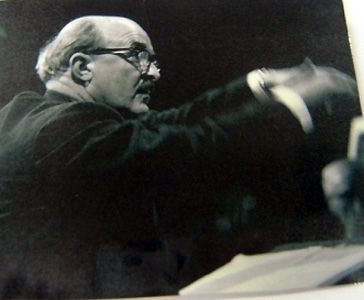
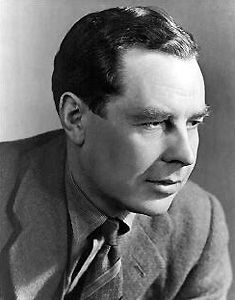

Mansel Thomas, Richard Addinsell, Carey Blyton.
Source: Dutton Epoch CD (my rip!)
Formats: FLAC(RAR), DDD Stereo, mp3(320)
File Sizes: 330 MB / 177 MB (FLAC version incl. cover & booklet)
The FLAC link has now expired. No more requests for this, please!
mp3 version – https://mega.co.nz/#!z1hTHBLa!n8wjXnxmxLlGjq8jigSQN-airFm5N2Po8ccsnkQBveI
Enjoy! Don’t share! Buy the original! And if you downloaded this album, could you kindly click on "Like"? 🙂
Maybe, if you got something for orchestra or jazz band that broadly fits the category.
I already uploaded a jazz piece in this thread, Tommy Evans’s The Green Seagull Suite, >here< (http://forums.ffshrine.org/f92/wimpel69s-could-film-music-classical-corner-work-121898/49.html#post2728347).
Many thanks!
Se???irse Bodley was born in Dublin in 1933 and studied at the Royal irish Academy of Music and
at University College, Dublin, spending the years from 1957 to 1959 in Stuttgart with a postgraduate
studentship from the National University of Ireland. In Stuttgart he studied composition with Johann
Nepomuk David, returning to Dublin to take up a lectureship at University College and from 1984 to
1998 serving as Associate Professor. He has coupled an interest in contemporary trends in music
with a study of Irish folk-music and of traditional Gaelic singing. He is active as an orchestral and
choral conductor, and as a piano accompanist.
The composer reflects on his symphonies: "Symphony No.4 was commissioned by the Orchestra
Sinfonica dell’Emilia Romagna "Arturo Toscanini". The first performance was given by that orchestra
at the Teatro Farnese in Parma on 21st June 1991. The conductor was Jos??? Ramon Encinar.
The music combines elements that have been present previously in my work at different times:
elements of Irish music, both in more obvious form and also as an influence in shaping the melodic
style; sharp dissonance; irregular forming; developing variation. (This last is especially important
here as the form is often quite fluid.) Unusually for me I here made my first references to classical
form in an orchestral work in many years. Clearly the movements are not in any of the classical
forms as such, but the style of the third movement could be related to the classical scherzo and
the finale to the rondo, in a very general way in each case.
Symphony No.5 (The Limerick Symphony) was commissioned by the Limerick Treaty 300
committee and was first performed in 1991 in Limerick as part of the Treaty commemorations. The
sieges of Limerick and the events that surrounded them and the subsequent treaty were complex
and involved political matters that had international ramifications. I subtitled this symphony The
Limerick Symphony to reflect in some way the human background to the historic events at
Limerick. Intentionally there are no guidelines as to the exact content of each movement; the
listener has to make the connections himself. Nevertheless I imagine that these connections
will not be too hard to make… The symphony is on a fairly large scale with five movements
and in general makes use of elements of Irish traditional musical style. These are integrated
into the music rather than used as a means of setting up a musical conflict. Extensive use is
made of developing variation with the musical form evolving as the music progresses rather
than using blocks of contrasted material. There are also a number of ideas that appear in
different movements."
Music Composed by Se???irse Bodley
Played by the RT??? National Symphony Orchestra of Ireland
Conducted by Colman Pearce
"Seoirse Bodley’s (b. Dublin, 1933) music reflects modern trends but also embraces
traditional elements of Irish folk music. This addition to Marco Polo’s ‘Irish Composers
Series’ brings two of his more recent orchestral scores to the catalog for the first time,
in capable performances from the National Symphony Orchestra of Ireland under
Colman Pearce. Bodley’s Symphony No. 4 (1991) uses over-arching variation technique
throughout its four movements. The most important cross-referenced theme occurs
near the start in the cellos and later furnishes material for the Andante, placed second;
this includes important solo passages (both nicely played here) for the first trumpet
and concertmaster. Irish folk themes (or what passes for them) are most evident
in the finale of this rather effortful piece…"
Classics Today
Source: Marco Polo CD (my rip!)
Formats: FLAC(RAR), DDD Stereo, mp3(320)
File Sizes: 266 MB / 181 MB (FLAC version incl. cover & booklet)
The FLAC link has now expired. No more requests for this, please!
mp3 version – https://mega.co.nz/#!HtRiSa5L!iijTVEodQ4paqkEoCBVNVPY2VOp5dpwbJ–SBAXMeEk
Enjoy! Don’t share! Buy the original! And if you downloaded this album, could you kindly click on "Like"? 🙂
Michael Daugherty’s (*1954) Strut (1989) joins a host of recent works that emphasize a
connection to blues, funk, and R&B idioms. It’s also one of the better such efforts, with pleasingly tricky
rhythmic shifts. It also has a restraint and concision one doesn’t always find in the composer’s more
recent works. Lukas Foss’s (1922-2009) For Toru is a brief, contemplative tone poem for
flute and strings that evokes the language of the late Toru Takemitsu as an homage. Foss is extremely
adept with suggesting the Japanese master’s sound without literally quoting it.
William Bolcom’s (*1938) Concerto Serenade of 1964 shows how early the composer had
already developed his trademark language of alternating between chromatic/atonal materials and more
vernacular American material. Much of the music suggests the brittleness, both of sound and intellect,
one hears in Stravinsky—late serial in the third movement, middle-period neo-classic in the last.
James Hanna (*1922) is represented by the final movement of his Fourth Symphony (1986),
which is based on a hymn tune by Lowell Mason, Downs. One hears in it a sincere and gentle utterance in
the manner of such American composers as Roy Harris.
The two subsequent works bespeak a conservative American lyricism of deep integrity. Alec Wilder
(1920–1980) was an uncategorizable composer—deeply committed to a stylish, romantic idiom that drew
on jazz and popular music from mid-century. As a consequence, he is often viewed as both a “classical”
composer and an elegant songwriter who has composed several cabaret standards. The 1979 Five Love
Songs for horn and strings is a late work, a distillation of gestures and harmonies from the golden
age of American song, a “song without words” for its age. Quincy Porter (1896–1966) was for
decades associated with Yale College and wrote music of unflagging sunniness, verve, and lyricism, in a
voice similar to that of his colleague Paul Hindemith (though it must be said that Porter’s tone is overall
more delicate and romantic). His 1941 Music for Strings is no exception to this description.
The final two works are arrangements. John Adams made his Todo Buenos Aires for violin
and string orchestra from a tango by the great Argentinian composer Astor Piazzolla (1921–1992).
It is distinguished by its fanciful writing for the solo fiddle, which creates a kaleidoscope of colors, often
percussive (such as pizzicato and rhythmicized scraping behind the bridge). Henri Pensis (1900–1958)
was the founding conductor of the Philharmonic Orchestra of Luxembourg and a fixture in Midwest music-
making, directing the Lincoln, Nebraska, Philharmonic. His Fantasy on Two Christmas Carols is a set
of variations on the Czech “Come, All Ye Shepherds,” with “Silent Night” floating above as a descant.
Music by (see above)
Played by the Miramar Sinfonietta
With Jeani Foster (flute) & William Barnewitz (French horn)
And Eric Segnitz (violin)
Henri B. Pensis (conductor)
"The Miramar Sinfonietta is a Milwaukee-area chamber orchestra originally founded for an occasional
purpose, the recording of Henri Pensis’s Fantasy on Two Christmas Carols (this composer, 1900–58,
was the father of the ensemble’s conductor). Apparently, they’ve decided to continue work with other
projects, this recording being the result. Except for the final two arrangements on the program, the
collection features American music for string orchestra and soloists. The Miramar plays with both
polish and crackle, and their director’s programming sense is pleasing. There is much here that is
engaging on a variety of levels—tuneful, sometimes challenging, eclectic but personal, never dogmatic."
Fanfare
Source: Albany Records CD (my rip!)
Formats: FLAC(RAR), DDD Stereo, mp3(320)
File Sizes: 364 MB / 154 MB (FLAC version incl. cover & booklet)
The FLAC link has now expired. No more requests for this, please!
mp3 version – https://mega.co.nz/#!LpBRGLzZ!JJJvki0wrxzpCUW8EQEJLpi5mW6kRJmNOkmHacL 7Wg0
Enjoy! Don’t share! Buy the original! And if you downloaded this album, could you kindly click on "Like"? 🙂
Australian composer Grant Foster (*1945) on his The Pearl of Dubai Suite: "There are some who
believe that Anastasia, the strong willed youngest daughter of Tsar Nicholas and Tsarina Alexandra,
left for Dubai in 1916 for the purpose of collecting pearls. She intended to return to St. Petersburg with the pearls so
that Faberg??? could design a special creation just for her. Aided by her cousin, Grand Duke Pavlovitch and her sister
Marie, blackmailed into helping her, a plan was carefully worked out so that she could leave the palace unnoticed;
her stand-in look-a-like, Regina taking her place whilst she was away. A catastrophic event in Dubai exposes the plan
and the family are informed that she is lost, presumed dead. Regina’s true identity, although revealed, was never
accepted as true by the revolutionary guard. As a result she was executed with the family. The Suite is in
four movements.
The Ballad of Reading Gaol: "In July, 2011 I decided to set the first seven verses of Oscar Wilde’s
profound “Ballad of Reading Gaol” to music. The composition ends with the famous lines: “Yet each man kills
the thing they love.” Since this recording I have started composing a second, much longer version of the Ballad.
Both versions are dedicated to Andrew Goodwin and Mira Yevtich."
Music Composed by Grant Foster
Played by the Novaya Rossia, Hermitage & Belorussian Symphony Orchestras
With Andrew Goodwin (tenor)
Conducted by Zaurbek Gugkaev
"There are plenty of tonal composers in the world today. There is an acute shortage, however, of composers
writing lush, romantic melodies. It’s almost as if most tonal composers have been intimidated by their atonal
colleagues into producing music lacking melody and grace. Grant Foster does not fit that description. His
music is filled with rich melodies that touch one’s sensibility and feed one’s emotions. I firmly believe that
the ability to write melody represents the utmost distillation of a composer’s personality. It is the most
concise musical definition of what a composer stands for. It also allows for the most effective means of
providing a structure for musical composition. Foster, an Australian-born composer and pianist, produces
all of this. He shamelessly and heartily takes his departure from Tchaikovsky and Rachmaninoff. His
melodic sensibility, however, is quite personal and different from theirs. I am reminded particularly of
the soaring tunes in the film music of Maurice Jarre. Foster also is technically well grounded. His
orchestration is transparent and rich. He constructs his compositions effectively and decisively. I really
love this album. I was listening to it during Hurricane Sandy, and it delivered consolation and relief to
my strained nerves. If you are almost ready to give up on contemporary music offering beauty and
solace, you owe it to yourself to give Grant Foster a try.
The Pearl of Dubai Suite is a piece based on the legend that Anastasia, the daughter of Czar Nicholas
and Alexandra, went to Dubai in 1916, while a stand-in was killed in her place at the execution of
the royal family. The opening section, The Winter Palace: 1916-1918 , is a well-constructed symphonic
poem. It opens with a mood of foreboding, and throughout the work there are interjections representing
street violence. The main theme is one of beauty and regret for a lost world. There also is a lyrical,
domestic theme. The Romance for Cello and Orchestra: Nicholas and Alexandra is wonderfully
intimate love music. The cello part sounds gentle and confiding—and Sergey Roldugin plays it
beautifully. As love music this is tender rather than filled with burning desire. A central orchestral
portion is highly nostalgic. This would be a very effective addition to the cello repertoire. The brief
Dubai is a splendid Near Eastern genre piece, in the mold of Albert Ketelbey. It’s the sort of thing
Arthur Fiedler would have loved to conduct. Lastly, the Fantasy for Piano and Orchestra: Anastasia
is the most substantial piece on the album. It is a true, free form fantasy. The texture reminds me
of d’Indy’s Symphony on a French Mountain Air . The piano part is mainly meditative rather than
heroic. Mira Yevtich possesses a complete command of Foster’s idiom. She plays with lovely tone,
sensitive phrasing, and an acute feeling for the shifting moods of the work.
Foster’s The Ballad of Reading Gaol is a setting of the first seven stanzas of the poem by Oscar
Wilde. They deal with the impending execution of a trooper in the Royal Horse Guards. Foster’s
ability to spin out long vocal lines is impressive. Andrew Goodwin and Yevtich are sensitive to
the work’s heartache and shifting shades of gray. At the line “The man had killed the thing he
loved,” Yevtich delivers pealing bells from the piano’s bass. The accompanying DVD contains
splendid live performances of the Fantasy and the Ballad . Following the former, Yevtich receives
well deserved rhythmic applause from the audience in Minsk. Throughout the CD and DVD,
conductor Zaurbek Gugkaev secures warm and committed playing from all three orchestras
he conducts. The sound engineering on CD and DVD is generally excellent, greatly abetting
the beauty of Foster’s orchestral settings. I have little doubt that Grant Foster is an important
composer. He really can pull at your heart strings. There certainly is a place for more agitated
contemporary music than Foster’s, but his is a voice we sorely need. Nothing is simpler or
more complex at the same time as beauty, and Foster delivers it."
Fanfare
Source: Quartz Records CD (my rip!)
Formats: FLAC(RAR), DDD Stereo, mp3(320)
File Sizes: 277 MB / 153 MB (FLAC version incl. cover & booklet)
The FLAC link has now expired. No more requests for this, please!
mp3 version – https://mega.co.nz/#!ukoDkLyI!-PZATbg97R4hpqKx0dpteJ3v0cZ0GgtuT2zWUYprvcE
Enjoy! Don’t share! Buy the original! And if you downloaded this album, could you kindly click on "Like"? 🙂
see:
Jacques Ibert: La Ballade de la Ge???le de Reading, Suite Elisb???thaine, etc
http://forums.ffshrine.org/f92/wimpel69s-could-film-music-classical-corner-work-121898/38.html#post2513216
🙂
———- Post added at 04:50 PM ———- Previous post was at 04:17 PM ———-
No.613
Chinese composer Shi Yong-Kang was born in Zhenhai, Zhejiang Province, in 1929. From 1950 to 1955
he studied at the Shanghai Conservatory of Music. After graduation he worked as a teacher at the Conservatory.
In 1983 he was appoint ed as vice-president of Xian Xinghai Conservatory in Guangzhou. Now he is a professor of
the Composition Department of the Conservatory. His compositions cover a wide range including symphony,
chamber music and dance music, with the symphonic poem The Legend of a Yellow Crane (which you can find
in this thread, >here< (http://forums.ffshrine.org/f92/wimpel69s-could-film-music-classical-corner-work-121898/2.html#post2190739)), Symphony No.1, "Dawn in the East", the Horn Concerto "Memory"
and the "First String Quartet" being representative works.
Composed in 1960, Dawn in the East has drawn its material from the revolutionary historical course from the
birth of the Chinese Communist party in 1927 to the junction of the main forces of the Chinese Workers’ and
Peasants’ Red Army in Jinggang Mountains. Jiangxi, in 1927.The symphony expresses the fighting career of the
Chinese communists, who, in the dark old China, advanced bravely wave upon wave seeking the truth. The first
movement, Overture Daybreak is in ternary form. The deep slow introduction leads to the depressing heavy-
first theme, which displays the calamity of the Chinese people under the rule of the warlords at the beginning
of this century. The solemn second theme reflects the awakening of the people. It was the Marxism that
brought the people light and hope. The allegro second movement Armed Uprising is in sonata form. It takes
as material the three armed uprisings of the Shanghai workers under the leadership of the Communist Party.
The primary theme expresses the vigorous pound of the people’s armed forces against the reactionary rule,
while thesecondary theme presents the people’s striving for a new victory. The slow third movement Mourning
in ternary form expresses the people’s mourning for the martyrs and their deep thinking about the way and
the future of the revolution. The fourth movement, finale, The Jinggang Mountains, is in sonata-rondo form.
The foundation of the Communist base area in the Jinggang Mountains opened up a triumphant chapter of
the Chinese revolution. With unconstrained magnificent tones the symphony enthusiastically extols the
great victory of the people’s revolution.
Music Composed by Yi Shong-Kang
Played by the Shanghai Philharmonic Orchestra
With Richard Deskur (horn)
Conducted by Cao Peng & Lin You-Sheng
"In October, 1927, during the Autumn Harvest Uprising, troops led by Mao Zedong marched to
Jinggang Mountain and set up the first rural revolutionary base. In late April, 1928, the remaining army
from the Nanchang Uprising, led by Zhu De and Chen Yi, joined Mao’s army. This has been known as
the Jinggang Mountain Forces Joining. On Jinggang Mountain, the CPC set up the 4th Army of the
Chinese Workers’ and Peasants’ Red Army, the first major Communist military power in the Chinese
revolution. The Jinggang Mountain Forces Joining proved to be a critical point in Chinese revolutionary
history. It is from there that the Chinese Communist army went on to stage a series of military
revolutions, leading to the liberation of all the Chinese people. Jinggang Mountain has now become
a hot tourist spot. A lot of people visit the site to understand the history of the revolution."

Meeting in the Yinggang Mountains.
Source: Naxos "Yellow River" CD (my download!)
Formats: DDD Stereo, mp3(320)
File Sizes: 136 MB (liner notes included)
Download Link – No FLAC version of this album is available
mp3 version – https://mega.co.nz/#!GtJiVCQZ!FQ9dizLDmphOk-IGGGDDe52mhhstt7PtZ328LjUBdYM
Enjoy! Don’t share! Buy the original! And if you downloaded this album, could you kindly click on "Like"? 🙂
The Chairman Dances is a 1985 composition by John Adams. Subtitled "Foxtrot for Orchestra",
the piece lasts about 13 minutes. The piece was composed on commission from the Milwaukee Symphony,
and is described by Adams as an "out take" from Act III of the opera he was working on at the time,
Nixon in China. Short Ride in a Fast Machine (1986) is one of two Two Fanfares for Orchestra
alongside Tromba Lontana. It is also known as Fanfare for Great Woods because it was commissioned
for the Great Woods Festival of the Pittsburgh Symphony Orchestra. Tromba Lontana was composed for
the Houston Symphony in commemoration of the 150th anniversary of Texas’s declaration of independence
from Mexico. It contains the voices of two trumpets that are separated from the orchestra, usually performing
in the balcony of the concert hall. Common Tones in Simple Time (1979) was Adams’ first orchestral
work, and, in his view, his purest piece of minimalism. Intended as an idyllic landscape, a “pastorale with
pulse,” it’s consistently gentle and subtle as delicate figurations gradually appear, evolve and blend over a
constant mellow background, creating sustained motion within a delicate expressive range, devoid of
jarring transitions or emotional jolts.
Music Composed by John Adams
Played by the San Francisco Symphony Orchestra
Conducted by Edo de Waart
"When, however, you get a world-class orchestra like the San Francisco Symphony and a
solid conductor in Edo De Waart (who was the orchestra’s music director from 1974
to 1985), who premiered many of Adams’ pieces and who know them perhaps better
than any orchestra around, the results are fascinating, as can be gauged in this Nonesuch
recording. It consists of "The Chairman Dances" (from the composer’s 1985 opera "Nixon
In China"); "Christian Zeal And Activity" (with an admittedly somewhat ponderous
evangelical sidebar stuck in there); "Tromba Lontana"; "Short Ride In A Fast Machine"
(almost certainly this composer’s most popular single piece, and for good reason too);
and "Common Tones In Simple Time." As is typical for Adams in particular, and
minimalist music in general, the orchestration is varied and vibrant, occasionally
using glockenspiel and synthesizers. If one has heard John Williams’ eerie scores
to Spielberg’s films ALWAYS and A.I.: ARTIFICIAL INTELLIGENCE, one can tell how
influential the minimalist movement has been on other composers of our time."
Amazon Reviewer
Source: Elektra Nonesuch CD (my rip!)
Formats: FLAC(RAR), DDD Stereo, mp3(320)
File Sizes: 203 MB / 118 MB
The FLAC link has now expired. No more requests for this, please!
mp3 version – https://mega.co.nz/#!C4ojCJLA!MQ_9VB3PdRCNBaDdkNPVc34D4jCJQ5MF8ZzCMHm ndgM
Enjoy! Don’t share! Buy the original! And if you downloaded this album, could you kindly click on "Like"? 🙂
Complete orchestral works (10 volumes) (joaquin rodrigo)
and any works by willi boskovsky?
wonderful recording, my first encounter with Chairmen it lifted me off my seat when the big Drum starts ;O)
It was my first Adams disc, too. I loved The Chairman Dances and Short Ride in a Fast Machine in particular. Haven’t heard those bettered since.
Yes, Rattle is so stiff, have a few radio recordings with MTT, Dudamel? and Salonen on the hard disk, but i must hear them again…and find ;O)
Mikis Theodorakis (*1925) is among the most popular and prolific composers of Greece. Without question,
he is the best-known Greek composer internationally. He was born on the island of Chios and studied at the Athens
Conservatory, and, subsequently, at the Paris Conservatoire (music analysis with Olivier Messiaen and conducting
with Eug???ne Bigot). From 1954 to 1960 he worked in Paris and London, composing symphonic music, ballet and
film music, Zorba the Greek being his most famous score. In 1960 he placed himself as a leader of the
regenerative cultural-political movement in Greece centered on the union of poetry and music, composing dozens
of song-cycles, oratorios, revues and music for Greek drama among other things. This movement was connected
with the progressive political forces of that period, which aimed, beyond the establishment of democratic life in
Greece, at a much deeper and broader rebirth of the Greek people. This was to bring him often at the centre of
political life, reaching a climax with his active participation in the resistance movement against the military
dictatorship (1967–74).
The Symphony No.1 is one of the early works by Theodorakis, written under the impression of German
occupation and its consequences. The maestro writes about this composition: "In this very symphony, the
influence of Dimitri Shostakovitch is unmistakable: he is the composer, next to Igor Stravinshy, who has
made the greatest impression on me. In the first movement, I broke with the c1assica1 sonata form and
tried to develop a new architecture, better adapted to the subject-matter of the work … The harmonics
come predominantly from the counterpoint of the individual voices and their compression; the orchestration
is just as dense and. polychromatic. Highly personal subjects are also present in the Second Movement,
"Elegy and Threnody", and in the Finale, in which the elegiac themes of lament are given new dimensions
by means of urgent rhythms and triumphant chords. With this music Theodorakis has set some painful
and tragic experiences of his youth into music. He calls it a "liturgy of consolation"."
Music Composed by Mikis Theodorakis
Played by the Athens State Symphony Orchestra
With Mary-Helen Nezi (mezzo-soprano)
Conducted by Helias Voudouris
Source: Legend Records CD (my rip!)
Formats: FLAC(RAR), DDD Stereo, mp3(320)
File Sizes: 364 MB / 168 MB
The FLAC link has now expired. No more requests for this, please!
mp3 version – https://mega.co.nz/#!qlQFkLhL!p60fNwv5jCj22McOfcDHuwBkzv53oHMkykcFsXl mfLs
Enjoy! Don’t share! Buy the original! And if you downloaded this album, could you kindly click on "Like"? 🙂
Winner of the Prix de Rome and the Lili Boulanger Prize, Kamran Ince was born in Montana in 1960 to
American/Turkish parents, but educated in Turkey before settling in the USA at the beginning of the 1980s.
Much of his work continues to be inspired by his love for the country of his upbringing. Symphony No.4 ‘Sardis’‚
is a depiction of a Bronze-age archeological site, complete with vivid images of dramatic Turkish landscapes.
Ince describes his Symphony No.3 ‘Siege of Vienna’‚ as ‘a synthesis of West and East … a meeting of
the characteristics of the two’ portrayed through the battles between Ottoman East and Habsburg West in
the sixteenth and seventeenth centuries.
Music Composed and Conducted by Kamran Ince
Played by the Prague Symphony Orchestra
"Since Kamran Ince’s Symphony No. 3, "Siege of Vienna" (1994-1995) and his
Symphony No. 4, "Sardis" (1999-2000) are programmatic in nature and not designed
to meet expectations of the classic form, one may wonder why these works are not
simply called tone poems. Ince paints vivid scenes of war’s brutality and tragedy in
the Symphony No. 3, and haunting impressions of ancient Turkish landscapes in the
Symphony No. 4, so he may be our contemporary equivalent of a Liszt or a Richard
Strauss, with something of their orchestral flair and a lot of their Romantic intensity.
But the music is episodic and depictive, and there is no transparent sonata design in
the Symphony No. 3, apart from the return of the Long March in the closing
movement to mark a kind of recapitulation; and there is little symphonic shape in
the cinematic Symphony No. 4, beyond the bare layout of a short introduction and
four movements. The elegiac Domes (1993) is perhaps the most effective piece
for its compact proportions, skillful orchestration, and direct emotions, and least
puzzling for its transparently organic construction. Ince’s performances with the
Prague Symphony Orchestra are as compelling as his scores, so he deserves
recognition for his able conducting."
Allmusic
Source: Naxos CD (my rip!)
Formats: FLAC(RAR), DDD Stereo, mp3(320)
File Sizes: 235 MB / 139 MB
The FLAC link has now expired. No more requests for this, please!
mp3 version – https://mega.co.nz/#!jsIxALJJ!Pqe8FoSTjbqmxwhYK7rNPfXib8XO3EhsfcXWCBM iqxQ
Enjoy! Don’t share! Buy the original! And if you downloaded this album, could you kindly click on "Like"? 🙂
Been a fan of his ever since Serpico and Z which I first heard (and saw the films) many years ago.
Having recently heard his ‘Ta Megala Erga (Major Projects)’ which is epic. Again many thanks indeed for his
Symphony No.1, Oedipus Tyrannos, The Feast of Assi-Gonia
Ulysses Kay (1917-1995) was the first notable African American composer to establish himself in
the white cultural mainstream with scores that almost never employed the jazz blues colors or pictorialism
employed by others, such as William Grant Still. He was very much a member of the musical establishment,
with a college post and a style that evolved along the lines of his contemporary, William Schuman.
Kay was the nephew of jazz cornetist and bandleader King Oliver. He grew up in Tucson, AZ, then, as now,
a city with a small, not very visible African American population. Kay obtained his bachelor’s in music from
the University of Arizona in 1938, then went on to obtain a master’s in 1940 at the Eastman School of Music,
where he studied with Bernard Rogers and Howard Hanson. During the following two summers, he studied
with Paul Hindemith at the Berkshire Music Center in Tanglewood. After wartime service in the Navy he
studied composition with Otto Luening at Columbia University (1946 – 1949). As a winner of the American
Rome Prize, he was affiliated with the American Academy in Rome from 1949 to 1952.
Kay pursued a career as a consultant to B.M.I. from 1953 to 1968, leaving that for an academic post at
New York’s Herbert H. Lehman College, part of the C.U.N.Y. system, where he remained until his retirement
in 1988. Kay became a model for minority composers who wished to be taken seriously in a white world.
He did this by blending in stylistically; his music sounded "American" in its rhythmic verve, but it almost
never employed blues, jazz, or African elements. After a spate of populist works in the 1940s, Kay
developed a somewhat more advanced but never avant-garde idiom, often contrapuntal and confidently
but not crushingly dissonant, with muscular melodies moving over strong and ever-shifting rhythms,
enhanced by a fine sense of orchestration. He was essentially a neo-Classicist, but a serious one like
Walter Piston, rather than a parodist like Igor Stravinsky.
The movie The Quiet One (1948) relates, in semidocumentary fashion, the inner workings of
the Wiltwyck School for Boys at Esopus, New York. The nonprofessional cast is headed by Donald Thompson
as emotionally disturbed youth Donald Peters. Under the compassionate ministrations of a psychiatric
counselor (Clarence Cooper) (a real-life Wiltwyck counselor), Donald recalls the various traumatic
events that have led up to his present troubled state. Though the film’s dialogue sounds spontaneous,
it was pre-scripted by critic James Agee, who also narrates the film. Of particular interest to modern
viewers is the fact that Donald Thompson is black. Unlike other "socially conscious" films of the late
1940s, The Quiet One does not make Donald’s race an issue in the proceedings; he is simply a
disturbed young boy in need of sympathetic treatment. The film received an Oscar nomination
for Best Story and Screenplay, and Kay arranged a suite from his score shortly after the movie
had been released.
Music Composed by Ulysses Kay
Played by the Metropolitan Philharmonic Orchestra
With Janet Hopkins (soprano) & Melanie Valencia (flute)
Conducted by Kevin Scott
"The resurgence of interest in concert music by African-American composers has not benefited
Ulysses Kay as much as it should have, and this well-executed program of Kay pieces by the
composer’s disciple Kevin Scott, leading New York’s Metropolitan Philharmonic Orchestra
(actually a group of freelance players), gives a clue as to why. Often the ear takes a bit of
tuning to hear what Kay was getting at, and not because his music was written in one of the
more difficult methods of his middle twentieth century heyday. The trick is in the nature of the
African-American component of Kay’s music, which, at least for listeners who come to Kay
from European tonal composers, isn’t attached to the usual framework of peppy French neo-
classicism: as Scott points out in his detailed and helpful (but unfortunately sloppily edited)
booklet notes, Kay’s European models were German and Italian rather than French. Perhaps
the ideal way to approach Kay is to listen to some jazz first: then, in both the more cinematic
language of the Suite from The Quiet One (1948) and the more chromatic Scherzi Musicali
and Aulos for flute and chamber orchestra of the 1960s, you might take a random wind line
and find it jazzy or bluesy more often than not, even as his sevenths and ninths blend into
the extended tonality of his various backdrops. Kay knew and was influenced by quite a
variety of other composers of his time, but he forged a highly personal style nevertheless.
The Suite from The Quiet One is not much heard these days but was quite celebrated when
it appeared in conjunction with a neo-realist look at the coming of age of an African-American
school child. Kay’s score is inward, psychological, and Scott compares it convincingly with
the music of Kay’s friend Bernard Herrmann. The Scherzi Musicali initially doesn’t seem to
be the playful work the title might suggest, but listen again — except in its two interludes,
which range across the timbres of its small group of winds and strings, it is focused on
subtle explorations of alternation between pairs of instruments or groups of them. The work
has a spirit of interaction that’s quite characteristic of jazz, even as jazz rhythms are almost
completely absent, and even the seemingly somber Adagio: Pi??? mosso movement (track 10)
might be considered a kind of scherzo. Kay’s handling of the instruments is assured
throughout, and the performances are clean and sympathetic. Here’s hoping this disc
furthers a Kay revival."
All Music
Source: Albany Records CD (my rip!)
Formats: FLAC(RAR), DDD Stereo, mp3(320)
File Sizes: 314 MB / 158 MB (FLAC version incl. cover & booklet)
The FLAC link has now expired. No more requests for this, please!
mp3 version – https://mega.co.nz/#!D0QiTLBQ!KZ_G2f-A_nhRC32t1VqOmn18koSr-2eHLMn3KbD–kE
Enjoy! Don’t share! Buy the original! And if you downloaded this album, could you kindly click on "Like"? 🙂
Uuno Klami is one of those more obscure Finnish composers who never quite made it from
under Sibelius’s shadow. Fortunately for us some of his orchestral scores have now been recorded,
several of them on BIS. Unfortunately Whirls, a ballet based on the Finnish epic poem the Kalevala,
only survives in rehearsal scores for Acts I and II, which were rediscovered in 1985. The Finnish
composer Kalevi Aho orchestrated these two acts and as Act III was never found wrote music for
that as well. When the projected performance of the completed ballet didn’t materialise Aho
recast the music he’d composed for the third act as his Symphonic Dances (1988).
Given that Aho’s Symphonic Dances offers a thrillingly visceral take on this epic (see Aho survey)
some may find his orchestration of Act I a bit restrained by comparison. Admittedly Act III probably has
the most dramatic potential but make no mistake Act I has its moments as well. Also, in terms of its
sound world Whirls strikes me as surprisingly suave and sophisticated – the French influence, perhaps –
with an occasional nod towards Prokofiev in its more insistent moments. In the ballet Ilmarinen the
smith uses his furnace to try and create a magical object known as the Sampo.
Aided and abetted by an army of slaves and the power of the four winds he finally achieves his goal in
Act III. The prelude and fanfare to the first act steals in quietly, the steady timp strokes and anvil sounds
setting the stage before the flames awake in track 2. There is an underlying rhythmic tread here, with
orchestral evocations of flickering flames and some atmospheric swoops at 2:40. In his liner-notes Aho
says Klami’s score ‘approaches free atonality’ and it’s that ‘fingerprint’ he strives to preserve here.
In any event those familiar with Aho’s works will recognise his economy of style and the ‘hear through’
quality of his orchestral writing.
Music Composed by Uuno Klami
Played by the Lahti Symphony Orchestra
With Esa Ruuttunen (baritone)
Conducted by Osmo V???nsk???
"Praised for his intense and dynamic performances, Osmo V???nsk??? is recognized for compelling
interpretations of the standard, contemporary and Nordic repertoires, as well as the close
rapport he establishes with the musicians he leads. In 2003 V???nsk??? became the tenth Music
Director of the Minnesota Orchestra, and has since drawn extraordinary reviews for concerts
both at home and abroad, including appearances at Carnegie Hall and the Lincoln Center,
performances in communities around Minnesota, and two European tours of major festivals
and European music capitals. In 2009 V???nsk??? and the Minnesota Orchestra returned to
Europe for concerts at venues including the Cologne and Berlin Philharmonie, Frankfurt
Alte Oper, Vienna Musikverein and the Barbican in London. V???nsk??? and the Minnesota
Orchestra have completed a five-year, five-disc project to record the complete Beethoven
symphonies for BIS, which received rave reviews."
Source: BIS CD (my rip!)
Formats: FLAC(RAR), DDD Stereo, mp3(320)
File Sizes: 241 MB / 167 MB (FLAC version incl. cover & booklet)
The FLAC link has now expired. No more requests for this, please!
mp3 version – https://mega.co.nz/#!2h5GhIYY!8B3SbZsmrvZTD7oWPqLYuLH98_UMBwh9GVUOCsw Wajw
Enjoy! Don’t share! Buy the original! And if you downloaded this album, could you kindly click on "Like"? 🙂
No.619
Peter Mennin (1923-1983) spent most of his life working within the academic environment
and his music, in the American symphonic tradition, speaks from a broad neo-Romantic imagination.
Mennin began his studies at Oberlin College, and upon completing military service in the early 1940s,
he obtained his bachelor’s, master’s and Ph.D. (1947) degrees at the Eastman School. After spending
a year in Europe in 1957-1958, Mennin was appointed the director of the Peabody Conservatory
where he remained from 1958 through 1962. He then became president of the Juilliard School of
Music. During his career he received awards from the American Academy of Arts and Letters and
the Guggenheim Foundation among many others, and served as chairman of the National Music
Council and president of the Naumberg Foundation.
The works on this album are a fine showcase for the composer’s style: asymmetrical melodies of
great lucidity and rhythmic invention, paired with a bright clarity of orchestration and line, dramatic
climaxes, and the use of chromatic inflection. Although not specifically "programmatic", the three
pieces here are highly dynamic, often aggressive and rhythmically charged.
Music Composed by Peter Mennin
Played by the Columbus (Ohio) Symphony Orchestra
Conducted by Christian Badea
"Mennin’s symphonies are indeed ‘viscerally exciting’ with an energy and power akin
to the symphonies of William Schuman but not necessarily sounding like Schuman’s.
Mennin was influenced by both Hindemith and Bartok but his music also owes much
to Renaissance counterpoint and polyphony. The mid period symphonies have been
compared to both Vaughan Williams and Sir William Walton both in the ferocious
angry energy of the fast movements(VW’s 4th, Walton’s 1st) but also the modal
lyricism of his slow movements.
The distinguished American critic Walter Simmons has also compared Mennin to
Edmund Rubbra and Vagn Holmboe in his evident determination to go his own
way regardless of musical fashion. The symphonies do become grimmer, more
angry, with increased chromaticism as time goes on(Nos. 7-9). All are-I would
argue-extremely impressive works(although perhaps the choral No.4 may be the
weakest?) and are undoubtedly of more consistent quality than those by Harris,
less academic than those by Piston, more challenging than those by Hanson or
Hovhaness(although I DO love the work of each of these composers too!)."
Source: New World Records CD (my rip!)
Formats: FLAC(RAR), DDD Stereo, mp3(320)
File Sizes: 214 MB / 127 MB
The FLAC link has now expired. No more requests for this, please!
mp3 version – https://mega.co.nz/#!K0YQULoa!wRAT7qGcC2s8UcyMmYiUmWTDdwIXDLSfxPBtJ6w cDHA
Liner notes: http://www.newworldrecords.org/linernotes/80371.pdf
Enjoy! Don’t share! Buy the original! And if you downloaded this album, could you kindly click on "Like"? 🙂
Howard Hanson was born in Wahoo, Nebraska, on 28 October 1896. He studied at the Institute of Musical Art,
before graduating from Northwestern University in 1916. He taught at the College of the Pacific, and the Conservatory
of Fine Arts, before winning the American Prix de Rome for his ballet Californian Forest Play of 1920. His appointment
as Director of the Eastman School, Rochester, inaugurated a 40 year association, during which Hanson taught
many composers of the younger generation, as well as shaping its orchestra, the Eastman Philharmonia, into a
body of national standing. This is reflected in the many recordings they made, particularly in the 1950s and ’60s
for the Mercury label, covering a wide range of American music in addition to Hanson’s own. In 1964, Hanson
founded the Institute of American Music of the Eastman School, marking the culmination of his pioneering work
into the study and dissemination of American music across a broad range of genres. He died on 26 February 1981.
As a composer, Hanson was an unashamed musical romantic. Perhaps through his Swedish ancestry, he displayed
an early and lifelong adherence to North European symphonism – particularly Sibelius, whose influence he transmuted
in very specific and, in his view, specifically American ways. This is nowhere more apparent than in his Nordic
Symphony, Op. 21, the first of the seven symphonies which would span the entirety of his composing career.
Completed in 1922 during his time in Rome, the influence of his then-teacher Respighi can be detected in the
powerfully evocative orchestral style. The fact, however, that it shares the same key, E minor, as Sibelius’s
First Symphony cannot be coincidental, as Hanson’s freewheeling and often intuitive approach to form
frequently brings to mind the Finnish composer.
Completed in 1933, Merry Mount was to be Hanson’s only opera. With a libretto by R. L. Stokes after the
novel by Nathanial Hawthorne, the premiere, under Tullio Serafin, took place at the Metropolitan Opera, New
York on February 10th, 1934. The scenario, concerning witchcraft and sexual obsession in seventeenth century
New England, offered unlimited scope to the composer’s full-bodied orchestration and lush harmonic manner.
Despite initial sucess, however, the opera was not revived until 1964 and seldom thereafter. Hanson compiled
the present five-movement suite in 1938 and recorded it in 1940.
Written during 1925-6, Pan and the Priest is an intriguing symphonic poem, which introduces a new
rhythmic clarity to Hanson’s compositional armoury. The opening idea sounds out mournfully, and appropriately,
on cor anglais, soon joined by clarinet and oboe, before strings add an atmospheric backdrop. The music
grows more animated over a steady pulse, reaching a short-lived climax, before solo wind effect a brooding
return to the opening.
Music Composed by Howard Hanson
Played by the Nashville Symphony Orchestra
Conducted by Kenneth Schermerhorn
"This exceptional new recording accomplishes many things at once: it brings a fine American orchestra
to disc for the first time on a major label; it offers CD premieres of some excellent unknown music;
and most important of all, it imbues Howard Hanson’s work with a stature and significance that
previous performances, including the composer’s own, barely suggest.
Start with the symphony. Composed in 1922 in Rome at the conclusion of a period of study with
Respighi, the “Nordic” often has been described as a sort of American gloss on the early symphonies
of Sibelius. Granted, the thematic material has a certain primal quality characteristic of the great
Finnish composer’s style in the 1890s, but there’s very little evidence of Sibelian austerity in Hanson’s
warmly sweeping tunes and richly blended orchestration. Indeed the principal theme of the finale
bears a striking rhythmic resemblance to the last of Spanish composer Joach???n Turina’s almost
exactly contemporary (1920) Danzas fantasticas. Furthermore, this First Symphony is if anything
even more structurally assured and formally concise than either of Sibelius’ first two. It’s also
worth pointing out that in 1922 Sibelius was still working on his Sixth Symphony, having put
the finishing touches on his First scarcely 25 years previously, so it would be neither historically
correct nor intellectually honest to call Hanson’s late-Romantic tonal musical language
anachronistic on account of its theoretically Sibelian antecedents, even if true.
The principal competition for this new recording of the First Symphony comes from the composer’s
classic Mercury Living Presence rendition; Gerard Schwarz on Delos offers neither the energy
and clarity of Hanson’s own version, nor the warmth and power of this newcomer. Kenneth
Schermerhorn’s interpretation is noticeably slower than Hanson’s own–all to the good. While a
composer’s views on his own music seldom lack interest, they also rarely reveal all (or even
most) of a work’s many facets. So while a general preference for fleetness does minimize the
shortcomings of Hanson’s excellent but undersized Eastman orchestra, it also seriously
understates his music’s epic sweep and lyrical exuberance. And it’s those qualities that
Schermerhorn and his Nashville band realize as never before, so much so that while the actual
tempos might be slower, the sense of physical movement, of momentum, is actually far greater,
and that makes the music vastly more powerful and exciting than in any earlier recording.
One of the most striking things about this orchestra is its warm, opulent string sound, in
evidence not just in the symphony but also in the gorgeous Rhythmic Variations on Two
Ancient Hymns for string orchestra. In the Nordic’s quick outer movements, the strings
play with a seductive tone and sweeping passion that simply places the music on a higher
expressive level than I would have thought possible. And the strings aren’t alone. Listen
to the confidence of the brass at the beginning of the finale, to the sparkling percussion
in the Merry Mount Suite, or to the soulful solos for English horn, oboe, clarinet, French
horn, and trumpet that open the symphonic poem Pan and the Priest. This last item, an
absolute stunner of a piece (one that also features an important piano obbligato) ought
henceforth to reenter the standard repertoire of orchestras everywhere.
Hanson is one of those composers whose easy musical idiom and success with a single
work (the “Romantic” Symphony) make underestimation of his achievement almost inevitable.
His very professionalism, the confident orchestral style that always sounds good even in
mediocre performances, tends to count against him. His music has acquired a reputation for
being “safe” and “foolproof”. Some works by Hanson may indeed come off well when played
indifferently, but the real test of their mettle lies in whether or not the music rises to and
sustains the call of greatness when taken seriously by a sympathetic conductor and played
to the hilt by an enthusiastic orchestra. It’s a test that every single minute of music on
this resplendently recorded disc passes with flying colors. An event!"
Classics Todayhttp://i8.photobucket.com/albums/a29/wombat65/p10s10_zps337f418b.gif
Source:Naxos CD (my rip!)
Formats: FLAC(RAR), DDD Stereo, mp3(320)
File Sizes: 300 MB / 164 MB (FLAC version incl. cover & booklet)
The FLAC link has now expired. No more requests for this, please!
mp3 version – https://mega.co.nz/#!et4EzJaa!4RxEG3DQgShWIhY1N-SQFeA9c8CipNn4dT1joyi-WBo
Enjoy! Don’t share! Buy the original! And if you downloaded this album, could you kindly click on "Like"? 🙂
The Overture 1940 is given a suitably tense outing. The clouded atmosphere reminded me of Stanley Bate’s
contemporaneous wartime Third Symphony but with restlessly, athletically positive incursions having Finzian and
Waltonian accents. This piece has a symphonic mien but ends in a trickle rather than an affirmative shudder. The
1938 Sinfonia is in effect his ‘Symphony No.0’ and was long thought lost. Arnell’s daughter found the score
among the estate of her late mother in Nebraska. Martin Yates edited it for performance. It’s another troubled work
written in troubled times. It has more calm than the "Overture" but the winter waters evoked by the Lento are cold
and in shade. Alun Darbyshire is guest principal oboe. He plays a prominent and gracious part in the "Andante sostenuto"
which once again has a Finzian lilt, blended with a chilly breeze that suggests more than temperature. The work ends
with a bracing Allegro vivace but not one without scudding black clouds.
The six- movement Dagenham Symphony was, unsurprisingly, a Ford commission for a film showcasing
the company’s Dagenham plant. It is boisterous and brilliant with a part for solo piano here played by Catherine
Edwards but taken by Arnell himself in the film. His years in the USA show in that one hears little echoes of
Roy Harris throughout. The final Assembly March movement is playful and serious yet with an undercurrent of optimism.
Landscapes and Figures – a tone poem – again has Catherine Edwards at the piano.This work is in eight
quite short movements, each of which has a piano solo introduction. For all of its later date the mood remains
earnest and at times racked with striving and pain even if some of the string writing hints at RVW in tempestuous
and seraphic moods. We know that Bernard Herrmann befriended and championed Arnell during his USA years.
One can discern Herrmann’s hand in the brass writing in "The Quarry". The piano foreword to Self Portrait (tr. 18)
at first recalls the radio telescope music from the score Herrmann wrote for The Day the Earth Stood Still.
This is overall an utterly enigmatic piece. In its piano solo writing the music hints at the ritual writing of
Ireland (Forgotten Rite) and Bax (Symphonic Variations). In "The Apotheosis – A Primitive"
the writing is lithe, lean and exuberant in a way that reminds me of Howard Ferguson’s Overture for an
Occasion yet with the buoyant optimism of Roy Harris woven in.
Music Composed by Richard Arnell
Played by the Royal Scottish National Orchestra
Conducted by Martin Yates
"It’s perhaps a bit of a stretch to refer to all these pieces as "Unnumbered Symphonies," but appellation
has little to do with the quality of the music, which is very high indeed. My favorite work on the disc is
the Overture 1940, a fourteen-minute work that sounds very much like Hindemith; indeed, it’s eerily
reminiscent of the first movement of Mathis der Maler. The Sinfonia, thought lost until it reemerged
after the composer’s death, is somewhat in the same vein. Lasting not quite half an hour, it too is
Hindemith-like, though less directly so than the Overture. Meanwhile, what is presented as the
Dagenham Symphony is music from Arnell’s score to the film Opus 65, a documentary commissioned
by the Ford motor company. Consisting of six movements, none of which goes beyond about three-
and-a-half minutes, this work has the by now expected Hindemith touches, plus a few moments
that recall Virgil Thomson’s documentary film music. Landscapes and Figures, the last work in this
album, was composed in the 1950s on commission from Thomas Beecham and the Edinburgh
Festival. Seven short movements, with the piano playing a role, follow each other in turn. It’s
engaging an intricate in its way, though for me it lacks a bit of the vigor of, say, the Overture
and the Sinfonia. All in all, this is another interesting and worthwhile offering of music by Arnell
as conducted by Martin Yates on the Dutton label. All the entries in this series are definitely
recommended."
Amazon Reviewer
Source: Dutton Epoch CD (my rip!)
Formats: FLAC(RAR), DDD Stereo, mp3(320)
File Sizes: 452 MB / 293 MB (FLAC version incl. cover & booklet)
The FLAC link has now expired. No more requests for this, please!
mp3 version – https://mega.co.nz/#!Gsh1zYBI!mUTxSZ1M1bjYrIQRCNjoe3ZpoTCjqJbaUFMJ5kJ 3Wc8
Enjoy! Don’t share! Buy the original! And if you downloaded this album, could you kindly click on "Like"? 🙂
———- Post added at 11:55 AM ———- Previous post was at 11:26 AM ———-
The FLAC links for posts No.599-610 have expired. Requests for these will not get a response.
Walter Piston’s Divertimento was commissioned by the International Society for Contemporary Music
and given its first performance by an ensemble of New York players at Columbia University in May, 1946. The group
was conducted by Dmitri Mitropoulos. The Three Tone Pictures of Charles Tomlinson Griffes were originally
composed for solo piano in 1915. At the request of Caroline Beebe, the pianist and director of the New York Chamber
Music Society, Griffes prepared a chamber ensemble version of the Tone Pictures. This version was premiered in
Greenwich, Connecticut, in June 1920, less than two months after the composer’s death. Ned Rorem composed his
Eleven Studies in 1959, at the request of Cameron Baird, the head of the Music Department at Buffalo University.
He had hired Rorem to teach a class in composition, give some public lectures and compose a work for chamber ensemble.
Unfortunately, Baird died before the premiere of the work, which the composer conducted at the University in May, 1960.
Aaron Copland’s Sextet is actually a chamber version of his Short Symphony. The original work was composed
between 1931 and 19933. The chamber version, Sextet, was composed in 1938 and given its first performance at Town
Hall in New York by a group of Juilliard graduate students in February 1939.
Music by Walter Piston, Charles Griffes, Ned Rorem & Aaron Copland
Played by the New York Chamber Ensemble
Conducted by Stephen Radcliffe
"While each of these pieces has been recorded before – all but the Piston currently have at least
one recording in the catalog – it was an excellent idea to bring all four together on a single disc.
They work together extremely well because of their differences as much as because of what they
have in common….The performances are very good. The bouncy vitality of the Copland and Piston
works is particularly well captured by Radcliffe and his excellent musicians….The recording is
good, quite clean and natural, but a little bit close. These flaws aside, this is a most enjoyable
disc that should find a welcome place in every collection of American music."
Fanfare
Source: Albany Records CD (my rip!)
Formats: FLAC(RAR), DDD Stereo, mp3(320)
File Sizes: 253 MB / 150 MB (FLAC version incl. cover & liner notes)
The FLAC link has now expired. No more requests for this, please!
mp3 version – https://mega.co.nz/#!akwS3QxK!53n3aBjF1RdlcCmU421OIM-POhYWPojeOqI4CqefGrg
Enjoy! Don’t share! Buy the original! And if you downloaded this album, could you kindly click on "Like"? 🙂
Joaqu???n Rodrigo (1901-1999) was born at Sagunto, Valencia, the son of a business-man, the youngest
of ten children. Diphtheria left him blind from the age of four, and this would mark his inclination to
cultivate his inner world and then dedicate himself completely to music. In 1906 the family moved to
Valencia, where Rodrigo had his first musical instruction in the Blind College. From 1917 to 1922 he
attended composition classes given by Francisco Antich at the Valencia Conservatory. His first works
were written in 1922 and two years later his orchestral Juglares was performed. It was at this time
that he came into contact with the group of avant-garde composers in Madrid, a stage that came to
an end when in 1925 he failed to win the Premio Nacional de M???sica, moving then to Paris, where
he came to know Dukas.
In 1925 Rodrigo entered his Cinco piezas infantiles for the Premio Nacional de la M???sica, which
was won by the spontaneous and innovative Sinfonietta by Ernesto Halffter. "Son chicos que
pasan" (Children pass by), the first movement, is a cheerful and playful march, suggesting the sound
of a parade of children in the street, ending with an ironic wink. "Despu???s de un cuento" (After a story)
creates the magic sounds, somewhat impressionistic, of a world of make-believe. The "Mazurka" is no
adult dance but a cheerful children’s holiday, which, however, transforms the style of Spanish salon music
of the nineteenth century. With "Plegaria" (Prayer) time seems to pause; the atmosphere is intimate and
nocturnal. The change is sudden with the final "Griter???a" (Shouting), a noisy explosion of childish chaos.
Rodrigo’s Soleriana is a work that was virtually forgotten until the celebration of the composer’s
centenary put it on the programme for various concerts. It originated as a ballet for the company of the
dancer Antonio, who performed it at the Granada Festival in July 1953. As orchestral music, away from
the theatre, the work had a very successful performance when Hans von Benda played it with the Berlin
Philharmonic on 22nd August of the same year. Soleriana is an evocation of eighteenth-century Spain,
based on the keyboard sonatas of Antonio Soler, to which it pays tribute, used in the score. Rodrigo
adopts here a refined neo-classicism, localised, in pastel colours, lightly scored. The composition is
perhaps somewhat formalist, but achieves its aim of bringing to life gracefully and from a modern point
of view the agreeable rococo style of the original.
The Zarabanda lejana was written in Paris in 1926. The first version was for guitar and was
dedicated to Emilio Pujol, although the first performance in Madrid in about 1928 was given by Regino
S???inz de la Maza. It re-creates the world of the sixteenth-century vihuela-player Luis de Mil???n; Rodrigo
himself described the atmosphere that he sought to re-create: ‘The old sarabande is heard, hidden
among the dense lattice-work cutting the Gordian knot, enveloped in a cloud of muted sounds’. In 1930
he arranged the work for string orchestra and added a contrasting Villancico. To the delicate, calm
Zarabanda, with its pleasing rhythmic balance, is set the Villancico, a simple rondo, rougher
in sonority and fresher in mood, that reveals direct writing for strings in its rich treatment of timbre.
Music Composed by Joaqu???n Rodrigo
Played by the Asturias Symphony Orchestra
Conducted by Maximiano Vald???s
"Eighteenth-century Spain is evoked in these works, full of the melodies and angular
rhythms of its gypsy and other folk cultures. The five "youthful" pieces of the third
suite are overflowing with good tunes and danceable rhythms."
The Audiophile Audition
Source: Naxos Records CD (my rip!)
Formats: FLAC(RAR), DDD Stereo, mp3(320)
File Sizes: 272 MB / 141 MB (FLAC version incl. cover & booklet)
The FLAC link has now expired. No more requests for this, please!
mp3 version – https://mega.co.nz/#!qpgHnDaI!CbOLAlvLJfUTrbH8BXnPE7LtfIKN9P0SEkC_ODT 26b4
Enjoy! Don’t share! Buy the original! And if you downloaded this album, could you kindly click on "Like"? 🙂
George Enescu (1881-1955) is considered the most important Romanian musician. He was a composer,
a violinist, a teacher, a pianist and a conductor, a complex and brilliant artistic personality. He began playing
the violin at the age of 4, receiving musical guidance from his parents and from a famous traditional singer,
Niculae Chioru. At the age of 5-6, he had already begun to compose. He started the professional study of
music under the guidance of professor Eduard Caudella. Between 1888 and 1894, he studied at the Music
Conservatory in Vienna, with Joseph Hellmesberger jr. (violin) and Robert Fuchs (composition), among
others. At only 8 years old, he has his first public appearance as a violinist. After graduating from the Music
Conservatory in Vienna, he continued his studies at the Music Conservatory in Paris (1895-1899), under the
guidance of Martin Pierre Marsick (violin), Andr??? G???dalge (contrapunctum) and Jules Massenet and Gabriel
Faur??? (composition). Among his colleagues in Paris, we mention Maurice Ravel, Florent Schmitt, Charles
Koechlin and Theodor Fuchs.
The first edition of the National Competition for Composition took place in 1913; it was established by
Enescu in order to stimulate the potential of Romanian music creation. The prizes were entirely and
generously offered by his own financial efforts, including the chance for the winners to specialize in
Paris and also the opportunity for official debut of their work. After the war, Enescu continued his
tours in Europe and also in the United States of America. His activity as a teacher added considerable
value to the artistic world. His top students were the violinists Christian Ferras, Ivry Gitlis,
Arthur Grumiaux and Yehudi Menuhin.
In 1936, on the 13th of March, the premiere of the masterpiece Oedipe, on a libretto by Edmond Fleg
took place in Paris. The performance had a huge success. During the second World War, Enescu remained
in Bucharest and he distinguished himself through an intense activity, also encouraging the creations of
other Romanian musicians, like Mihail Jora, Constantin Silvestri, Ionel Perlea, Theodor Rogalski and Sabin Drăgoi.
Music Composed by George Enescu
Played by the "George Enescu" Bucharest Philharmonic Orchestra
Conducted by Cristian Mandeal
"The iconic Romanian composer George Enescu (1881-1955) has not reached yet the worldwide
fame he actually deserves. Authoritative critics and reputed scholars have always advocated his
superb gifts not only as violin virtuoso – it is well-known that his recordings made date and remained
truly interpretive benchmarks -, as conductor, pedagogue or pianist, but mainly as a profound and
inspired composer in the XXth century. Some of these voices claim for Enescu a place among the
giants, on equal footing with Shostakovich, Stravinsky or Bartok, and do consider his masterpiece
"Oedipe" as one of the greatest operas of the modern age. Lord Yehudi Menuhin (the beloved
former pupil of Enescu) said once that "the time of Enescu is to come".
As Enescu’s widespread recognition is still awaited, it remains for the Romanian musicians to
champion his music and propagate it on the international stage, to reveal that huge treasure
of beauties, deep (yet, often contradictory) feelings and profound thoughts compounding a work
valuable in its own right and escaping the strict classification in certain currents or fashions.
Since 1958 in Romania takes place an important international festival (now with a rhythm of two
years) to honor the name of George Enescu. There is one imposed condition, namely that all
the invited orchestras must include a work by Enescu in their concerts during the Bucharest festival.
This way the world-renowned ensembles get accustomed with his oeuvre and, once deciphered
and assumed, it is kept in their current repertory. Maybe, it is performed even in other places,
in tours or recording sessions. Unfortunately, Enescu’s works still seem too difficult to conductors
and orchestras, the idiom of the scores and their particular mood remaining alien to contemporary
musicians. Consequently, these scores remain so to a large audience as well, hence preventing
it from a priceless treasure of musical beauties. Notwithstanding some famous conductors (such
as Lawrence Foster or Gennady Rozhdestvensky) have constantly championed and extensively
recorded Enescu lately, to both their probity and his benefit.
However, the first Romanian Rhapsody composed at 19 years (together with a second one,
both bearing the opus number 11) gained a worldwide fame for its lovely folk tunes (in fact,
all Enescu’s works are imbued with such folk aromas) and vivid Romanian rhythms, becoming
definitely the best known of all his compositions. Here it is performed with an infectious empathy
by the Romanian conductor Cristian Mandeal (former pupil of Celibidache and Karajan) along
with his musicians from "George Enescu" Philharmonic Orchestra. The two suites (no.2 in C
major op.20 & no.3 in D major op.27 "Villageoise") attest for Enescu’s neo-classical facet.
Although the two pieces differ from one another in mood and character (even their moments
of composition witnessed slightly different stages in Enescu’s career), they reveal a mighty
symphonist with a keen sense of colours and orchestral textures, a rigorous and honest
musician devoted to principles and truth, extracting the sap of his composition from folk
melodies of his people.
All in all a superb five-star recording, enjoyable and highly recommended!"
Amazon Reviewer
Source: Arte Nova CD (my rip!)
Formats: FLAC(RAR), DDD Stereo, mp3(320)
File Sizes: 283 MB / 156 MB
The FLAC link has now expired. No more requests for this, please!
mp3 version – https://mega.co.nz/#!O5QRUSJI!ftcCHXdXTN8RiwLKOkuk1YN4wwOvcxJHcIAMRk2 wXEA
Enjoy! Don’t share! Buy the original! And if you downloaded this album, could you kindly click on "Like"? 🙂
The distinguished American composer Paul Creston (1906-1985) was born as Giuseppe Guttoveggio in New York City
to Italian immigrant parents. Though as a child he studied piano and organ with Gaston Dethier and Pietro Yon respectively,
he enjoyed no such mentoring in composition. The itch to compose, however, came early, and by the age of eight he was
already trying his hand at creating music. As an essentially self-taught composer he maintained that his greatest teachers
were Bach, Scarlatti, Chopin, Debussy and Ravel. Despite having no connection with an established musical institution, as
did Walter Piston, for example, with Harvard and the Boston Symphony Orchestra, Creston managed to attract audiences
during the Great Depression, quite rapidly, in fact. In 1938 he was awarded a Guggenheim Fellowship, and in 1941 he won
the New York Music Critics’ Circle Award. The following year, Arturo Toscanini conducted his Choric Dance No. 2 with the
NBC Symphony. Over the next several years, other major conductors and orchestras performed his music, including his first
and second symphonies. Creston’s music was clearly being heard during an era when classical music was, if not mainstream,
at least disseminated on mainstream radio and in concert halls far and wide. His tonally centered harmonic vocabulary found
a cordial reception among musicians and concert-goers alike during the period extending from the 1930s through the years
following World War II, the same era in which Aaron Copland captivated the American concert audience with his
popular/populist ballets.
Creston composed the Toccata for the fortieth anniversary of The Cleveland Orchestra in 1957. George Szell, the
ensemble’s famed music director, conducted the premi???re on 17th October of that year. From the Italian for “touch”, the
centuries-old toccata suggests a work of seemingly improvisatory character demanding (and rewarding) the highest levels
of virtuosity. The resultant score bristles with unstoppable energy and provides ample opportunities for individual musicians
to take a place in the spotlight. The piece’s primary theme, fashioned from widely spaced intervals somewhat redolent of
Copland, sounds unmistakably American. A sequence of solos for clarinet, flute, oboe, bassoon dot the musical landscape
like a series of awe-inspiring sonic vistas. Occasional Latin-esque riffs extend the American connection southward.
Textures are lean and neo-classic ??? la Stravinsky but without his customary acerbity.
Creston’s Symphony No.5 was commissioned to celebrate the 25th anniversary of the National Symphony Orchestra.
The first movement, marked Con moto, begins softly with a long unison string theme that evolves into a faster fugal
episode. There follows an increase in urgency and dynamic levels achieved through layering of more strings, brass and
percussion. The Largo opens with strings rising dramatically to an emphatic chordal eruption from the orchestra. A sense
of passion and unrest continues, though less aggressively than in the first movement. The finale, Maestoso – Allegro,
begins dramatically with barking brasses and surging rhythms punctuated by aggressive percussion and timpani. A sudden
quieting of the orchestra leads to a new theme in the upper strings against quietly insistent rhythmic prodding from the
rest of the ensemble. Brass instruments introduce a new theme, assertive but far more positive in mood than anything
heard previously in the symphony. This highly rhythmic music conveys a sense of near-manic jubilation, and the work
comes to an abrupt and emphatic close.
The Choreografic Suite, written in 1965 and intended for the ballet stage, embraces America’s love of bright lights
and eccentric movement. It is driven by rhythmic difference, either in consecutively changing patterns (the extremely
difficult "Burletta" movement) or in the metric mob scene of the Festive Dance at the end. The orchestra has the top-
heavy brass and grandiose gesturings of Hollywood movie music. Creston, like Bernstein, found a certain innocent beauty
in the melodramatic, the slightly trashy and the sentimental.
Music Composed by Paul Creston
Played by the Seattle & New York Chamber Symphony Orchestras
Conducted by Gerard Schwarz
"The indefatigable Gerard Schwarz continues his invaluable pioneering work on behalf of American music with
this second volume of orchestral music by Paul Creston (PD reviewed the first in 12/92). The dashingly scored
Toccata from 1957 makes a swaggering curtain-raiser here: its outer portions revel in passages of enormous
rhythmic panache (a real Creston trademark) and writing of great soloistic flair, whilst the contrasting central
Andante section luxuriates in a contemplative balm. The overall impression created is somewhat akin to a mini
concerto for orchestra, so it comes as no surprise to learn that the work was written for George Szell and the
Cleveland Orchestra to celebrate that dazzling group’s fortieth anniversary.
First performed the previous year, the Fifth Symphony also boasts a largely extrovert demeanour. A feeling of
restlessness pervades the Con moto opening movement which soon acquires a formidable propulsion, its
surging string-lines, stamping rhythms and opulent, percussion-laden tuttis at times reminiscent of Ravel or
Roussel (if lacking the innate good taste of both those French masters). The emotional quotient remains pretty
high for the ensuing Largo, whose richly-woven, almost indecently lush climaxes are offset by some particularly
ingratiating writing for solo winds, not least for the cor anglais towards the close. High spirits return with a
vengeance in the finale which, after a flamboyantly rhetorical flourish for openers, surges brazenly forward
to a rousingly jubilant conclusion. Like the Toccata, it’s hot-blooded music, passionately essayed by Schwarz
and his expert Seattle players, and excitingly engineered as well.
However, the most extended item on this Creston miscellany is the 29-minute Choreografic Suite.
Composed in 1965, it has five movements, each of which contains much pleasingly tuneful invention.
Working with his ‘other’ band (the admirable New York Chamber Symphony Orchestra), Schwarz obtains
thoroughly decent results and the slightly dry, ‘theatre-pit’ ambience suits the music admirably. Like so
many previous Schwarz/Delos compilations, here is another undertaking very well accomplished indeed.
More please!’"
Gramophone
Source: Delos CD (my rip!)
Formats: FLAC(RAR), DDD Stereo, mp3(320)
File Sizes: 306 MB / 155 MB (FLAC version incl. artwork & booklet)
The FLAC link has now expired. No more requests for this, please!
mp3 version – https://mega.co.nz/#!vt5DwL5C!-osL7OUCpCtuLozarzt78HgaOifBS9eQ_bkJm2JxhOQ
Enjoy! Don’t share! Buy the original! And if you downloaded this album, could you kindly click on "Like"? 🙂
The three piano pieces that constitute Gaspard de la Nuit are recorded here in an orchestration
of 1990 by the Romanian-born composer Marius Constant. Ravel was introduced to the
poems of Aloysius Bertrand by the pianist Ricardo Vi???es, who gave the first performance of Gaspard de
la nuit in January 1909. Each of the three pieces is preceded, in the score, by the relevant prose-poem
of Bertrand. Before "Ondine" four lines are quoted from Charles Brugnot: "I thought I heard a faint harmony
casting a spell upon my sleep, and, close by, a murmur drifting by, like the halting song of a sad and
gentle voice. Listen!—Listen!—It is I, it is Ondine who brushes with these drops of water the sonorous diamond-
shaped panes of your window, lit by the bleak rays of the moon; and here, in a robe of watered silk, is
the lady of the castle, who contemplates from her balcony the beauties of the starry night and slumbering lake."
The poem continues, evoking the water-spirits, and ending with the mortal’s rejection of Ondine’s desire to
take him to her palace as king of the lakes. She cries and then, with a burst of laughter, disappears in streams
of water down the blue window-panes. The music, in a demanding enough texture, said by Ravel to rival in
difficulty Balakirev’s Islamey, captures the mood of the poem, evoking the movement of the water and
the story that lies hidden in it. The original piano piece was dedicated to the pianist Harold Bauer.
A quotation from Faust precedes "Le gibet": "What do I see stir around this gibbet?" – Bertrand’s reply amplifies
this: "Ah! Could it be the cry of the north wind at night that I hear, or a sigh from the dead man hanging from
the gallows? Could it be the chirp of a cricket hidden in the moss and barren ivy that out of pity clothe the foot
of the scaffold? Could it be a fly out hunting, blowing his horn by those deaf ears to sound the mort? Could
it be a beetle plucking a bloodied hair from that shaven head as it crawls along its uneven path? Or could it
be a spider spinning a length of muslin as a tie for that strangled neck? It’s the bell that tolls on the city
walls, below the horizon, and the corpse of a hanged man reddened by the setting sun." The bell is heard
tolling as the music begins, showing a haunted landscape. "Le gibet" is dedicated to the critic Jean Marnold.
Bertrand’s poem "Scarbo" is preceded by lines from the French translation, Contes nocturnes, of
Nachtst???cke (Night Pieces) by ETA Hoffmann, known to contemporaries as ‘Gespenster Hoffmann’,
Ghost Hoffmann. "He looked under the bed, in the fire-place, in the chest;—no-one. He could not understand
how it had got in, or how it had escaped." Bertrand gives more detail about his elusive spirit: "Oh, how
often I’ve seen and heard him, Scarbo, when at midnight the moon gleams in the sky like a silver
escutcheon on an azure banner, spangled with golden bees! How often I’ve heard his drone-like laugh
in the shadows of my bedchamber, the sound of his nails scratching on the silk hangings of my bed! How
often I’ve seen him leap from the ceiling, pirouette on one leg and roll around the room like a spindle
fallen from a witch’s spinning wheel! And just when I thought he’d disappeared, the goblin would rise up
between me and the moon like the tower of a Gothic cathedral, a little golden bell swinging on his
pointed hat! Soon, though, his body would turn bluish, translucent as candle wax, his face as pale as
the wax of a candle-end—and suddenly he would vanish from sight." The music, dedicated to the
pianist and conductor Rudolph Ganz, reflects the activity of the elusive goblin, now here, now there,
and then extinguished, like a light.
Ravel wrote his piano Le tombeau de Couperin between 1914 and 1917. It serves, in its form
as a dance suite, as a tribute to Fran???ois Couperin, the great French composer of the early eighteenth
century, and, more generally, as he claimed, to the French music of that period, but also as a tribute,
in the dedication of each piece, to friends who fell in the war. It was first performed in Paris in April
1919 by the pianist Marguerite Long. In the same year Ravel arranged four of the six pieces as an
orchestral suite. The orchestral work opens with a "Pr???lude", followed by a "Forlane" that bears a
more directly discernible relationship with the work of Couperin. An elegant and evocative "Menuet"
with a musette trio section is followed in the orchestral suite by the final lively "Rigaudon".
The orchestral suite was first performed in 1920 and served as a score for the Ballet su???dois
in November of the same year.
Music Composed by Maurice Ravel
Played by the Orchestre de Paris
Wuth Carole Boucquet (reciter)
Conducted by Christoph Eschenbach
"This somewhat uneven disc has one important thing going for it: the best performance
is also the thing most worth having–specifically, Marius Constant’s marvelous orchestration
of Gaspard de la nuit. Like Ravel’s best work, Constant will have you believing that the
piano original never existed, and he achieves a genuinely Ravelian sound (the solo
contrabassoon that launches Scarbo is a particularly idiomatic touch). Christoph Eschenbach
and his players really dig into the piece too, offering the necessary delicacy (in Ondine
and Le Gibet) as well as fireworks where required. I loathe recitation of any kind in a
musical context, so having the French poems read prior to each movement holds no
appeal at all for me, but listeners can either include French actress Carole Bouquet’s
contribution or not, as suits individual tastes.
The remainder of the program consists of an aptly bright and gutsy Alborada del
gracioso, along with rather ordinary traversals of Minuet antique and the ubiquitous
Pavane pour une infante d???funte. These last two aren’t exactly geared to highlight
interpretive genius in any event, though the live recording before a mostly very quiet
audience still projects a bit more ambient noise than some listeners might find
comfortable in the Pavane. The same observation holds true in Le tombeau de
Couperin, an interpretation that the French would call “correct”, meaning “nothing
special”. Although the sonics are essentially good and audibly natural, this delicate
work seems a bit lost in an acoustic that better suits the pieces for large orchestra."
Classics Today
Source: Ondine Records CD (my rip!)
Formats: FLAC(RAR), DDD Stereo, mp3(320)
File Sizes: 299 MB / 168 MB
The FLAC link has now expired. No more requests for this, please!
mp3 version – https://mega.co.nz/#!6lQHEJjb!hJYjU7NMLkukJKeLt2EX3LZLvWhHFwOn_A3mzMG-UYA
Enjoy! Don’t share! Buy the original! And if you downloaded this album, could you kindly click on "Like"? 🙂
Roberto Sierra was born in 1953 in Vega Baja, Puerto Rico, and studied composition both in
Puerto Rico and Europe, where one his teachers was Gy???rgy Ligeti at the Hochschule f???r Musik in
Hamburg, Germany.
His three Sinfonias (symphonies in all but the name) burst with color and excitement, mixing
popular and classical idioms, reflecting his Puerto-Rican heritage. As he writes, "That is how I
hear music: in Technicolor, not black and white. It’s not only timbre, it’s harmony! I believe
that different colors have different emotions." Currently serving as Old Dominion Professor of Composition
at Cornell University, Sierra was composer-in-residence with the Milwaukee Symphony from 1989-1992
and with the Philadelphia Orchestra in 2000-2001. The three works on this album constitute a revealing window
into his evolution as an orchestral composer.
Music Composed by Roberto Sierra
Played by the Frost Symphony Orchestra of Miami University
Conducted by Thomas M. Sleeper
"Roberto Sierra’s Third Symphony [sic!] sounds remarkably like one of Morton Gould’s Latin American
Symphonettes. Lest this sound like a criticism, bear in mind that I regard those works as absolute gems,
and the willingness of Sierra to write music that is light, bright, and effervescent is a wholly positive
indication of his compositional range rather than an inability to get serious. Granted, he is more of a
romantic than Gould, particularly in the dreamy second-movement Habanera, with its exotic melodic
arabesques, and his scale is certainly larger. But this Latin-flavored music has much the same energy,
charm, and compositional integrity.
Sierra’s first two symphonies, in any case, showcase his ability to be quite serious, emotionally speaking,
without compromising his music’s brilliance. No. 1 is a compact piece that makes charming reference
in spots to Beethoven’s First Symphony. It’s a sign of Sierra’s talent that he makes these gestures
entirely his own. They don’t sound like borrowings or foreign objects at all. As with the Second
Symphony, which is cast in the form of a single-movement passacaglia, the First makes no obvious
reference to Latin-American music, but the excitement and rhythmic energy are there all the same.
Not the least of Sierra’s gifts is the ability to write highly dissonant music that’s still enjoyable and
tantalizing to the ear.
These performances, by the University of Miami’s Frost Symphony Orchestra, are pretty terrific.
The playing is excellent, and conductor Thomas Sleeper lets the music sing and dance as the composer
clearly intended. There may be a moment or two where the musicians sound a touch stressed
(the brass toward the end of the Second Symphony), but if I were the composer I’d be thrilled to
use this disc as a musical calling-card. The engineering is also top-notch. I’ve heard some very
catty comments about Sierra’s work, as if exploiting one’s own musical heritage while working in
large forms is "pandering". If that is true, then the same must be true of composers as diverse
as Haydn, Dvor???k, Tchaikovsky, Stravinsky, hell, even Bach. Try this disc, and discover what it is
that makes Sierra’s colleagues jealous."
David Hurwitz, ClassicsToday http://i8.photobucket.com/albums/a29/wombat65/p10s10_zps337f418b.gif
Source: Albany Records CD (my rip!)
Formats: FLAC(RAR), DDD Stereo, mp3(320)
File Sizes: 253 MB / 128 MB (FLAC version incl. booklet)
The FLAC link has now expired. No more requests for this, please!
mp3 version – https://mega.co.nz/#!exZwTbwA!QvssjAdYAWbyTy429YzOR-xl4QzCAEXIYRrUG_bga20
Enjoy! Don’t share! Buy the original! And if you downloaded this album, could you kindly click on "Like"? 🙂
William Alwyn composed some fifty works for the orchestra, including five symphonies, a sinfonietta,
concertos for flute, oboe, violin, piano, harp, three concerti grossi, and many other descriptive shorter pieces.
The seven works on this recording show Alwyn responding in his own individual way to the various challenges
presented to him in writing for the orchestra, from the early Five Preludes, in which one can sense already
his keen ear for orchestral colour, through to the self-assured scoring of his maturity in the evocative
Autumn Legend.
Overture to a Masque was completed in London on 1 May 1940, and its intended premi???re was scheduled
for the 24th September that same year at Queen’s Hall as part of the Promenade Season of concerts. Because
of the bombing of London during the "Blitz", the premiere was cancelled. The work fell into oblivion and was
thought to be lost until 50 years later when it was discovered in the archives of the London Symphony Orchestra
prior to its first recording. The Overture is made up of three sections, two lively outer ones framing a more
reflective middle section. After a brief descending figure in flutes, clarinets and bassoons, oboes announce
the main theme and rhythmic idea, which develops into a lively syncopated dance. Then the opening melodic
and rhythmic figure returns in the trumpets leading into the more contemplative middle section that works
up to a brief climax before we return to the opening idea, this time announced by the clarinets. The syncopated
dance returns, after which a tranquil mood is reached before a sudden crescendo in the horns leads to a
fortissimo restatement of the opening rhythmic figure, bringing the work to an abrupt close.
The Pastoral Fantasia for viola and string orchestra was composed between June and October 1939.
As the clouds of war were gathering, it is clear that this gentle rhapsodic work is a nostalgic look back to an
England of times past when things moved at a slower pace and life in general was more pleasant. However,
with the onset of World War II this way of life would be shattered forever. Tragic Interlude for two horns,
timpani and string orchestra was completed in London during November and December 1936. From the
fortissimo anguished cry of the strings, heavily punctuated by horns and timpani, at the outset through to
the pianissimo tranquillo coda, Alwyn’s passionate elegy underlines most effectively the lines from this novel,
and a sense of pain, loss and desolation are all too apparent.
The tuneful and delightful Suite of Scottish Dances for small orchestra from 1946 is derived
from two old books of Scottish airs and dances dating from around 1790. The work is dedicated to Muir
Mathieson, the man who had conducted the music to many British films during the 1930s, 40s and 50s,
including many of Alwyn’s.
Music Composed by William Alwyn
Played by the Royal Liverpool Philharmonic Orchestra
Conducted by David Lloyd-Jones
"This disc, featuring some of Alwyn’s orchestral music, adds to Naxos’ already impressive
discography of his music, which includes all the symphonies and piano concertos, among
songs and chamber music. The seven works presented here reveal the composer’s own
unique sense of lush orchestration and unique harmony.
Responsive to the challenges of orchestral writing, Alwyn gives us music of much under-
rated quality and craftsmanship. Each work stands out from the buoyant Overture to a
Masque and Concerto Grosso No 1, to the almost Vaughan Williams-ike Pastoral Fantasia,
revealing a special quality of string writing only achieved by English composers.
As well as including the world premiere recording of the melancholic but tender Five
Preludes, this disc affords us a harrowing performance of the Tragic Interlude and the
darkly coloured tone poem Autumn Legends.
Closing with a joyful and committed performance of the Suite of Scottish Dances, this
disc is a wonderful cross-section of the unique musicianship achieved by Alwyn. The
RLPO gives a balanced, rich performance, wonderfully directed by the ever musically
sympathetic David Lloyd-Jones. If you are building up a collection of English music,
this disc is a must-have. If you are not, then you should be."
MUSA
Source: Naxos CD (my rip!)
Formats: FLAC(RAR), DDD Stereo, mp3(320)
File Sizes: 271 MB / 163 MB (FLAC version incl. cover & booklet)
The FLAC link has now expired. No more requests for this, please!
mp3 version – https://mega.co.nz/#!74xAQS7Y!U9HRzvXHfx52PAL27vZKmQM0_FVlV00FKvTyNX6 c3wI
Enjoy! Don’t share! Buy the original! And if you downloaded this album, could you kindly click on "Like"? 🙂
P.S.: Someone (and of course one who never shared anything here himself, quelle surprise!) just had the chutzpah to
email me asking for "all the FLAC links" since his ears were too precious, he wrote, to bear the mp3 format given that he was using
such high-grade headphones. One more such inquiry and I shall consider stopping to post FLAC versions altogether.
Beethoven doesn’t make Batman superfluous, and you can like both Richard Strauss and karate films.
For as Niels Marthinsen (*1963) has demonstrated, pop culture can renew classical music. Not by
banalizing art to pop, but by acknowledging the cultural references of people of our time.
Marthinsen’s love of pop culture reaches new heights in his Symphony No.2, "Snapshot
Symphony". It is a fantasy trip to exotic regions as Niels Marthinsen knows them from film,
TV and the Internet. A modern variant of the Romantic idea of unattainable horizons that are at
least as good in dreams as in reality. The old Romantics knew these faraway lands from novels
and beautifying oil paintings. Today our mental images are fed by the electronic media. Niels
Marthinsen, who in his own words lives "a shockingly ordinary life" with wife and children in a
suburb of Copenhagen, could easily have visited the exotic tropics in reality but doesn’t miss it,
after all the impressions he has received from the Internet, film and TV. The ‘artificial’ glimpses
are also valid glimpses.
"I’ve never been in Mexico and Arabia, and certainly not in China," explains Marthinsen. "But I
love the sounds of these countries that I know from Hollywood and pop culture: when Clint Eastwood
rides ‘south of the border’, when Disney’s "Aladdin" and "Mulan" take me along to the Orient, when
Arab pop blares out of the windows of a ghettomobile… and bullfight trumpet music, the sound of
acrobatic mayhem from John Woo’s Hong Kong karate virtuosi and so on: powerful images on the
retina and eardrum.
"The memories of this ethno-pop film music have become a symphony on my inner eardrum.
The symphony is a huge slide show of musical snapshots from my mental journey into western
pop culture’s versions of three exotic places: Mexico, Arabia and China. The musical idiom is my
own, the melodies come from out there. I use all the devices of the new pling-plong music (as
well as a few I’ve invented myself) to create a fantastical, modern orchestral sound where lots
of tunes from either east or west play together, interweaving in various keys and at various
speeds, all held tightly in place by a living, dancing pulse.
"The symphony is in three movements. "Fiesta Mexicana" is a red-hot, chili-pepperish mariachi
mosaic – Mexican party music staged at an ever-accelerating tempo, mixed with potent bullfighter
fanfares. "Arabian Nights" takes place on the outskirts of a big Arab city when darkness falls; where
the desert begins and the city stops. The ancient music of the sands of Arabia mixes with belly-
dancer music and the modern Middle Eastern pop that gradually takes over when the starry
night gets too cold to be out in. "Great Fireworks in China" is precisely what the title says: a
giant firework display of Chinese melodies in a virtuoso high-octane orchestral paint-box:
flaming dragons, aerial bombs, incandescent volcanoes, white snakes and fantastic lucky
rockets that scare away the evil demons. The three movements can be played separately.
But they belong close together, for alongside the melodies from the exotic countries there’s
a music that comes from inside my own head, and which is developed all the way through
the work: images of something more personal, like expressions on the faces of total strangers
in a holiday snapshot showing feelings you recognize in yourself."
Batman has turned out to be one of the most enduring superhero figures. Since the fairly
primitive stories in the 1950s and 1960s, new writers, artists and film directors have deepened
the themes in this modern folk tale. And now Batman has his own classical instrumental concerto!
A work that follows on seamlessly from Marthinsen’s treatment of the monster films in his first
symphony from 2005, Monster Symphony (No.530 in this thread. Batman’s foes The Joker,
Two-Face and The Penguin all appear in Marthinsen’s unusual Concerto for Three Trombones,
"In the Shadow of the Bat", from 2009. "A central idea of modern versions of the Batman
myth is that Batman is created by the fantastic villains that he fights, and they are created by
him – and that Batman is driven by revenge and hate, barely held in check by an intense
sense of justice. Batman represents ‘the dark side’ while the villains are hyper-imaginative,
colourful, creative characters who happen to be completely insane," explains Marthinsen.
Music Composed by Niels Marthinsen
Played by the Aarhus Symphony Orchestra
With H???kan Bj???rkman, J???rgen van Rijen & Stefan Schulz (trombones)
Conducted by Christian Lindberg
"Orchestral canvases from Denmark’s pop-art symphonist. Niels Marthinsen’s Snapshot
Symphony (2009) follows its predecessor, Monster (1995, 10/06), by 14 years and equal
blithe disregard for Classical norms. A topsy-turvy Fiesta Mexicana is succeeded by an
Arabian Nights in which Disneyan pastiche gets over-familiar with the score of ‘The Mummy’.
The finale, Fireworks in China, is a stop-start orchestral toccata, noisy with lots of rudimentary
‘local colour’ (though at one point sounding like Gershwin!). This is picture-postcard
symphonism, conceived in the film studio and drawn in poster paints and broad strokes.
On its own terms it is undeniably effective but the shades of Bruckner, Nielsen and Holmboe
can rest easy.
Marthinsen’s style has its subtleties and the dark, single-span Concerto for three trombones
In the Shadow of the Bat (2009) inhabits a very different expressiveworld. His idiom is
better suited to concerto-writing than the symphonic (the result here is more convincing)
and full of fascinating passages, such as the Villa-Lobos-on-speed dialogue for the solo
choir and orchestral brass starting a little after 4’00".
The ‘Opera Trailers’, Snow White’s Mirror (2010) and The King of Utopiaville (2009), if
nothing else show what a busy composer he is. As with the previous issue, these are Marthinsen
at his most approachable and would make likeable concert openers. Christian Lindberg relishes
their sound worlds and the various challenges provided by music that is not as easy to play
as it sounds. The Aarhus Symphony Orchestra respond with ???lan once more and Dacapo’s
sound is as terrific as ever. I fail to understand how their superb catalogue has managed to
remain under the critical radar so much."
Gramophone
Source: Dacapo Records CD (my rip!)
Formats: FLAC(RAR), DDD Stereo, mp3(320)
File Sizes: 328 MB / 173 MB (FLAC version incl. cover & booklet)
The FLAC link has now expired. No more requests for this, please!
mp3 version – https://mega.co.nz/#!jpQBHQqS!wVADRBNLTNMj8dta1a0qNQF_tN-eMzPRamyGsKp2w6s
Enjoy! Don’t share! Buy the original! And if you downloaded this album, could you kindly click on "Like"? 🙂
Listening to it now. Rousing, dramatic, and the first track in my opinion has a Christmasy feel about it (if you happen to be listening to it at Christmas time that is). Superb music. Again many thanks indeed.
I posted his equally colorful Monster Symphony as No.530:
After a brief period as an elementary and high school music teacher, Turkish composer
Ahmed Adnan Saygun (1907-1991) won a contest sponsored by the Ministry of Education
which enabled him to go to Paris to study music in 1928. He returned to Turkey in 1931 and
resumed teaching. He was forced to resign from a post as conductor of the Ankara Presidential
SO because of hearing failure. A position as an inspector of Halkevis or cultural institutions led
to his research into Turkish folk music, collaborating with Bart???k. This earned him a reputation
as a leading authority on folklore. He is known as a notable figure in the Turkish Five and enjoys a
rich creative life in addition to his accomplishments in research. His compositions are a combination
of Romantic and Impressionist styles, with later works that employ more recent techniques.
The oratorio Yunus Emre brought his work to the attention of the world.
While Saygun’s masterful Symphonies Nos. 3 and 5 have no specific programs, their
emotional and physical turbulence and dramatic intensity are the hallmarks of good film music.
Saygun uses modal melodies and harmonies and these are derived from those of his homeland.
Saygun, with half an eye on the west also uses intense chromaticism even atonality. His palette
therefore is broad and colourful. Rhythmically the Bart???k influence is strong. Saygun had after
all been Bart???k’s assistant on his field trips. They shared these intensive folk-music studies during
the mid-1930s travelling around Anatolia. In these two symphonies we hear dark and passionate
and passionate music, often dazzling with orchestral brilliance and virtuosity which can easily hold
its own with the works of Western masters. These works are characterized by and impressively
demonstrate the adaptability of traditional western forms but which also abound in elements of
non-western thinking.
Music Composed by Ahmed Adnan Saygun
Played by the Staatsphilharmonie Rheinland-Pfalz
Conducted by Ari Rasilainen
"Saygun’s Third Symphony is a masterpiece, reflecting both the composer’s roots in Turkish folk
music and also a compositional sophistication that recalls Bart???k (whom the composer assisted on
ethno-musicological expeditions in Turkey). At 38 minutes, it’s a major statement, full of evocative
sonorities created by swirling strings, harps, celesta, and percussion. Both symphonies in fact reveal
much the same style, largely dissonant but clearly melodic, with frequent rhythmic ostinatos propelling
the music along. The Third Symphony ends boldly, the Fifth enigmatically, but there’s a prevailing
nocturnal quality to Saygun’s music that gives it a bewitching, hypnotic sensuality quite unlike
anything else you may have heard. If your taste runs toward the modernist school of Romantic
nationalism, you’ll find this music really marvelous.
Ari Rasilainen, always a reliable guide to the unusual, as his numerous previous outings for CPO
have proven, turns in typically committed, exciting performances. The Staatsphilharmonie Rheinland-
Pfalz plays bravely: this is very virtuosic writing, and the brass at times show the strain–but there
are no major technical problems and the sonics are typically excellent. This is the second disc in CPO’s
ongoing series of Saygun symphonies (and hopefully other orchestral music as well). It’s one of those
quiet, unheralded editions that most listeners probably won’t notice or think about twice, but it really
does deserve your support. Saygun was a very gifted composer with the kind of personal voice that
collectors look for in unfamiliar repertoire, and his evocative style consistently compels attention.
If you give this a shot, you won’t be sorry."
David Hurwitz, Classics Today
Source: CPO Records CD (my rip!)
Formats: FLAC(RAR), DDD Stereo, mp3(320)
File Sizes: 278 MB / 143 MB (FLAC version incl. artwork & booklet)
The FLAC link has now expired. No more requests for this, please!
mp3 version – https://mega.co.nz/#!S4gCRZDR!nRsMHm17R2_0etzxqSh99ofNZVktZx3HYhqgScy asd4
Enjoy! Don’t share! Buy the original! And if you downloaded this album, could you kindly click on "Like"? 🙂
Ever wondered what the "Gettysburg Address" would sound like if delivered by Darth Vader?
Well, you can live out that particular fantasy if you listen to this spirited rendition of Copland’s
Lincoln Portrait, with none other than James Earl Jones himself narrating! "Herbivores
eat plants. Carnivores eat herbivores" [not from the Gettysburg Address]. And Jones is certainly
a versatile actor/speaker. He and Gerard Schwarz already collaborated in a Hanson recording – but the real
star here are The Seattle Symphony and their truly impassioned playing. Half rousing tone
poem, half spirited setting of Lincoln’s speech, it is a true American classic.
The program, consisting entirely of Americana of the the particularly patriotic kind, is certainly
well-assembled. It also includes the Fanfare for the Common Man (version for brass and
percussion), the rarely-played Canticle of Freedom, and An Outdoor Overture.
Roy Harris’s American Creed, another rarely recorded work, is filled with the
composer’s usual open harmonies and melodic expansiveness and is actually a very complex triple
fugue. A superb program, superbly performed and recorded!
Music by Aaron Copland & Roy Harris
Played by The Seattle Symphony and Chorale
With James Earl Jones (narrator)
Conducted by Gerard Schwarz
"Another winner in Delos’s American series. Of the conductors competing with recordings of American moderns
– Schwarz, Thomas, Slatkin, and Knussen – Schwarz has consistently come up with some of the most
interesting material. He has heroically revived Hanson, Creston, Piston, Hovhaness, and Diamond and for
the most part ignored the current hot American stocks: Copland, Bernstein, Gershwin, Barber. Copland
and Bernstein are well-represented on disc by the composers themselves. Consequently, there is a less
compelling reason to duplicate than to explore. Even so, Schwarz has given us some out-of-the-way
Copland – the Canticle of Freedom and the original brass-and-percussion version of Fanfare for the Common Man.
[Copland] favored a "flat" reading [in his Lincoln Portrait], as opposed to a flamboyant one. In this,
believe it or not, I feel he chose wrongly. I’ve heard many readers, including Adlai Stevenson and Copland’s
favorite, Henry Fonda, and they only compound the problem. My favorite reader, believe it or not, was Carl
Sandburg (Kostelanetz conducting on a Columbia LP) – corny as hell. I suspect Copland hated it, and I could
care less. Sandburg understood instinctively that the connective text was music, pure and simple, rather
than a logical argument or even sense, and you listened to a virtuoso declaimer of poetry triumph in a
spoken aria. James Earl Jones is my second favorite reader, for the same reasons, although the character
of the declamation differs.
Schwarz turns in a fabulous account, full of evidence that he has seriously thought about the piece. Copland
builds the work from two motives: a heavy dotted-rhythm slow march and a fanfare idea, similar to the
Fanfare for the Common Man. The opening, in which most conductors, including Copland, strive for the epic,
Schwarz raises to tragedy. In many ways, it’s a nostalgic reading – one that knows more than even Copland
at the time of composition could have known. Schwarz starts low, slow, and distant and builds a magnificent
span of crescendo. He judges everything so well that the orchestra always has room to get louder. The
second movement dances as it should, but a subsidiary theme harmonized in the strings sounds the tragic
note again – as if it were the suffering of the disenfranchised under the bustle and optimism of the first half
of the 19th century. The third movement is pure magic. Jones takes Lincoln’s familiar words out of my
school-room (do kids still memorize the Gettysburg Address?) and makes them new. Jones sounds as if
he’s pondered for himself their significance. He’s not simply hitting the rhetorical marks.
American Creed falls into two parts: "Free to Dream" and "Free to Build." The titles lead one to suspect
a programmatic work, but I find both parts more abstract. They set a large emotional frame for the music,
but closer looks for more specific links I believe would not pay off. Harris has an idiosyncratic sense of melody,
counterpoint, and harmony. An American, I react to Harris’s music the way I imagine an Englishman reacts
to Elgar or Vaughan Williams – that is, at a level absolutely irrelevant to the technical merits of the piece,
considerable though they might be. In Harris’s case, considerable indeed. "Free to Build," for example, is a
triple fugue. Yet even here, the fugue is merely a means. Harris constructs a sound-world I can imagine
Lincoln and Whitman in – that is, the best of my country."
Steve Schartz, Classical Music Net
Source: Delos CD (my rip!)
Formats: FLAC(RAR), DDD Stereo, mp3(320)
File Sizes: 243 MB / 141 MB
The FLAC link has now expired. No more requests for this, please!
mp3 version – https://mega.co.nz/#!ut41gLrB!DN12ND0zqPs10oHEDPmqSRWmO8bUu4Qb6tGfwtk fnGo
Enjoy! Don’t share! Buy the original! And if you downloaded this album, could you kindly click on "Like"? 🙂
Raymonda (Russian: Раймонда) is a ballet in three acts, four scenes with an apotheosis, choreographed by
Marius Petipa, with music by Alexander Glazunov, his opus 57. First presented by the Imperial Ballet at the
Imperial Mariinsky Theatre on 19 January [O.S. 7 January] 1898 in St. Petersburg, Russia. Among the ballet’s most
celebrated passages is the Pas Classique hongrois or Raymonda Pas de dix from the third act, which is often
performed independently.
Although the ballet is still performed regularly by the Mariinsky Ballet, Petipa’s choreographic text was largely revised
by Konstantin Sergeyev when he mounted a new version of the ballet in 1948, a version still performed by the
company to the present day. It is primarily the Sergeyev edition of the choreography that is performed throughout
the world today by way of the versions staged by Rudolf Nureyev and Anna-Marie Homes.
The original choreography and mise-en-sc???ne of the Imperial Ballet’s production of Raymonda was recorded circa
1903 in the Stepanov method of choreographic notation as Petipa himself took dancers through rehearsals, among
them the ballerina Olga Preobrajenskaya who danced the title role. This notation is part of Harvard University’s
Sergeyev Collection. In 2011 Sergei Vikharev utilized this notation to stage an almost totally complete
reconstruction of the original 1898 production for the Teatro alla Scala.
Music Composed by Alexander Glazunov
Played by the Moscow Symphony Orchestra
Conducted by Alexander Anissimov
"Alexander Anissimov was a conductor unfamiliar to me (some may have heard his much-praised
Tchaikovsky Cherevichki at Wexford). He keeps the Moscow Symphony Orchestra on their toes:
the strings are keener of articulation than their Bolshoi or Kirov counterparts while balances and
dynamics are all observed in an end result of greater sophistication than you might expect from
this source (with handsome sound to match). Anissimov excels in the grand symphonic unfolding
of the first two numbers and the two Entr’actes, over which he takes more time and care than
Fedotov [conducting Kirov]."
Gramophone
Source: Naxos CDs (my rip!)
Formats: FLAC(RAR), DDD Stereo, mp3(320)
File Sizes: 613 MB / 323 MB (incl. cover & booklet)
The FLAC link has now expired. No more requests for this, please!
mp3 version – https://mega.co.nz/#!71hSVb4I!sV7ANwlaO–gZsks7uml3M732aPArOatMJbj3fliH3g
Enjoy! Don’t share! Buy the original! And if you downloaded this album, could you kindly click on "Like"? 🙂
The musical heritage of Great Britain is as long established as that of any European country and has
enjoyed several golden eras. Nevertheless it has to be conceded that there was an awful ring of truth
about the nineteenth-century German jibe ‘Das Land ohne Musik’ (‘the land without music’), for at that
time British music had been at a low ebb since the death of Handel. Many reasons have been advanced
to account for this and they point to one conclusion: what the Germans were essentially referring to
as ‘music’ was opera and, more specifically, the genre that had grown out of opera—orchestral music.
During the nineteenth century the German-speaking countries had a virtual monopoly of symphonic
and orchestral music, and its influence on the rest of Europe was immense. Lacking a native operatic
tradition, and thereby the organisations that engaged orchestras on a permanent basis, Britain was
regrettably slow to turn to this rapidly developing medium.
Chevy Chace [7’56] Sir George Macfarren (1813-1887)
Romeo and Julia op. 86 [9’37] Henry Hugo Pierson (1815-1873)
Macbeth [8’02] Sir Arthur Sullivan (1842-1900)
Prospero [9’09] Frederick Corder (1852-1932)
Froissart op. 19 [13’13] Sir Edward Elgar (1857-1934)
Ouverture to an Unwritten Tragedy [10’48] Sir Hubert Parry (1848-1918)
Britannia – A Nautical Overture [7’20] Sir Alexander Campbell Mackenzie (1847-1935)
Music by [see above]
Played by the English Northern Philharmonia
Conducted by David Lloyd-Jones
"This disc was one of my perennial favourites in the Hyperion catalogue and its reissue as a
bargain price CD is doubly welcome. Lloyd-Jones is a charismatic interpreter of these dashing
pieces and the indomitable English spirit is certainly present in each and every work. Elgar’s
‘Froissart’ has received more memorable contributions, especially from Barbirolli, but Lloyd
Jones is definitely not to be undone. The rare works by Pierson and Mcfarren definitely come
to life quite magically and Sullivan’s ‘Macbeth’ is also wonderfully done. Parry’s ‘Overture to
an Unwritten Tragedy’ is a bit lean but that is not the orchestra’s fault, indeed they certainly
come of their own in Mackenzie’s spirited ‘Brittania’. The notes are as detailed and precise
as one could imagine. You cannot be a true British bulldog if you are without this one!"
Classical Net
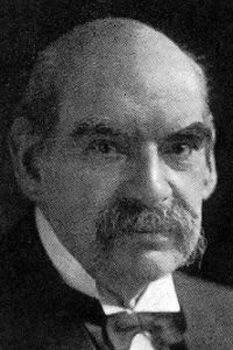
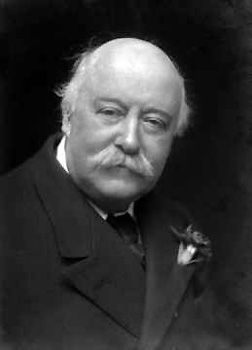

Frederick Corder, Charles Hubert Parry, Henry Hugo Pierson.
Source: Hyperion Records CD (my rip!)
Formats: FLAC(RAR), DDD Stereo, mp3(320)
File Sizes: 265 MB / 164 MB
The FLAC link has now expired. No more requests for this, please!
mp3 version – https://mega.co.nz/#!28xj0BoA!aSoLxKQ1RyU7aCMlWap9Oo2r9W16wjrA30NxrkX w_Qs
Enjoy! Don’t share! Buy the original! And if you downloaded this album, could you kindly click on "Like"? 🙂
Among the leading figures in Italian music between 1918 and 1939, Alfredo Casella was trained in Paris
at the Conservatoire as a pupil of Faur???. Returning to Italy, he did much to introduce contemporary music, as
understood in Paris, to the Italian public. He was active not only as a composer but also as a pianist and
conductor. His developing style of composition reflects international contemporary influences and trends.
Casella wrote symphonies, concertos and other works reflecting his changing style, from the avant-garde to
neoclassicism and generally diatonic writing, spiced with dissonance. His Paganiniana proclaims its origin in
its title; also of note are a Suite from La giara and a Serenata derived from an earlier chamber work.
Like the Serenata, the Concerto (arranged for string orchestra by Emil Stein) and the Divertimento
per Fulvia (Fulvia was the composer’s daughter) are typical examples of Casella’s sprightly neo-classicsim,
with lively dances interspersed with meditative or lyrical movements.
Music Composed by Alfredo Casella
Played by the Haydn Orchestra Bolzano e Trento
Conducted by Alun Francis
"There isn’t much to say here except that Casella was a genius way ahead of his time, and that his music,
especially as performed here, has that timeless and transluscent quality peculiar to Italian music of the
20th century. Francis is an outstanding artist, one of the world’s most literate and adventurous conductors.
The superb Bolzano orchestra makes a splendid match for him with this and all the other material they’ve
done. When we talk about great "marriages" between conductors and orchestras, this combination will
most certainly come up in conversation! Listen to the Divertimento and you’ll agree with me that this
ensemble possesses one of the most talented sets of strings you’ve heard in a long time. Treasure this
disc and give a copy to someone you truly care about because you’ll be listening to it over and over again."
Amazon Reviewer
Source: CPO Records CD (my rip!)
Formats: FLAC(RAR), DDD Stereo, mp3(320)
File Sizes: 295 MB / 157 MB
The FLAC link has now expired. No more requests for this, please!
mp3 version – https://mega.co.nz/#!epwB3ZzS!u7VH4SrJQdJuy4qFBpv-7Nam1mLwq78ua_E6C_KR3gk
Enjoy! Don’t share! Buy the original! And if you downloaded this album, could you kindly click on "Like"? 🙂
The Australian composer Alfred Francis Hill was born in Melbourne in 1870, the son of a halter who had
moved to Australia from England in order, at first, to seek his fortune in the gold-fields. His father had musical
interests and in New Zealand, where the family had moved in 1872, Hill had a chance to develop his musical
interests, as he grew up, playing the cornet in the family amateur concert party. It was on the advice of a visiting
violin virtuoso, Brahms’s former collaborator, the violinist Ede Rem???nyi, that it was decided that Hill and an older
brother, a singer, should be sent to study in Leipzig. Hill spent four years there as a student of Gustav Schreck,
a thorough teacher who taught him harmony and encouraged his composition. He also took lessons from the
violinist Hans Sill and from the musicologist Oscar Paul. The influence of Leipzig, where he played in the
Gewandhaus Orchestra under Carl Reinecke and in concerts directed by Tchaikovsky, Brahms and other
leading composers of the time, remained strong throughout his life. He died in 1960.
Hill’s Symphony No.5, ‘Camival’, was derived, in 1955, from the 1912 String Quartet in A minor. At the
time of the original composition he had joined Cyril Monk’s Austral Quartet as second violin, w but the
transformation of the ‘Carnival’ Quartet is complete. The work opens with a lively first movement, proceeding
to an equally energetic Scherzo. The slow movement opens with a gently drawn-out melody, as always in
the style inculcated in Leipzig in the 1890s and none the worse for that. The tradition survived with Hill in
part because of his own conservatism but was also a result of his relative isolation from the mainstream of
Western music and the new course it was taking, even in 1912, and most certainly by 1955. The Adagio is
a fine example of music of an earlier age and is followed by an Allego risoluto, a dance movement of varied
textures, including an episode for solo violin and a solemn chorale, framed by the emphatic Spanish-style
dance that provides the main thematic element in the movement.
As Night Falls, described as a Poem for Orchestra and originally apparently for piano, is evocative and
lyrical, befitting its title. It is followed by a gently poignant and romantic orchestral piece, A R???verie. The
Short Symphony in C major (Symphony No.10) was written in 1958 and is again based on an earlier String
Quartet in C major, written twenty years before, after Hill’s resignation from the New South Wales Conservatorium.
The first movement starts with a slow, solemn and relatively extended opening section, leading to a lively Allegro,
which suddenly emerges in all its romantic lyricism, to return once more to the mood with which the movement
began, before ending in full lyrical splendour. The slow movement launches itself into sombre territory, the
main thematic material framing a central lyrical section featuring solo woodwind, in which each instrument
takes its turn. The symphony ends with a vigorous enough Allegretto, which belies the direction that heads it.
This and what goes before are testimony to the soundness of Hill’s craftsmanship and to the effectiveness
of his schooling in Leipzig, as well as to a distinct affinity to the composers of the late nineteenth century
in Europe, to Grieg and to Dvoř???k, and others of his own generation.
This is the second album of Alfred Hill’s symphonies that I’m posting in this thread, the first (covering Symphonies
Nos. 3 & 7, plus The Moon’s Golden Horn and The Lost Hunter, can be found >here< (http://forums.ffshrine.org/f92/wimpel69s-could-film-music-classical-corner-work-121898/34.html#post2443949)).
Music Composed by Alfred Hill
Played by the Queensland Symphony Orchestra
Conducted by Wilfred Lehmann
"The brevity of his works helps with the general impression of Hill’s music being of perfectly
judged balance. Carnival runs the gamut from Italianate raciness and Verdian elan through
Venetian crowds and midnight fireworks, to the grave pavane of the third movement and the
Massenet-like snap (think of the music for El Cid) of the finale. No. 10 gives us a slow
Mendelssohnian introduction, a Bruchian adagio of warm fragrant romance and a final
allegretto that is a distant relation of the prestos from the Italian or Scotch symphonies.
The four short works are less old-fashioned (if that is important). Night Falls is of gentle
demeanour sharing atmosphere with Dvor???k’s Serenade for Strings. Reverie has clouds
floating contentedly through a moon-illumined sky. Regrets is a romantic flood teetering
on the edge of Khachaturyan’s Phrygia Adagio from Spartacus while Tribute to a Musician
has Brahmsian warmth, tranquillity and no violence whatsoever. A complete 79 minutes
of these orchestral miniatures by Hill (there are a lot more!) would make a very
acceptable CD."
Musicweb
Source: Marco Polo CD (my rip!)
Formats: FLAC(RAR), DDD Stereo, mp3(320)
File Sizes: 237 MB / 124 MB
The FLAC link has now expired. No more requests for this, please!
mp3 version – https://mega.co.nz/#!S8IBRRbZ!jfE7q94-HrE2hwUZlO2HxviOWrRmRtxEJbSi4kkIKpU
Enjoy! Don’t share! Buy the original! And if you downloaded this album, could you kindly click on "Like"? 🙂
Alfred Schnittke’s The Gogol Suite was derived by Gennady Rozhdestvensky from incidental music
written for an anthology of Gogol’s plays. The anthology, entitled "Inspector General’s Story" was originally presented
by the Taganka theatre. Labyrinths is a ballet in "five episodes" that deals with the tensions and eventual
relief in a relationship between two people. A "lyrical duet" emphasizes the initial, happy stage of the relationship,
followed by conflict in the movement "episodes". The mill of "everyday life" leads to threatening "nightmares".
"Labyrinths" finally guides the protagonists not towards confusion and disarray, but to a process of self-discovery
and newly found tenderness.
Music Composed by Alfred Schnittke
Played by the Malm??? Symphony Orchestra
Conducted by Lev Markiz
"Lev Markiz began his career as a virtuoso violinist, but like many talented soloists, gradually turned
toward conducting. In both roles he has enjoyed much success, though he will likely be remembered as
a conductor first. He was a friend of both Shostakovich and Schnittke, two composers with whose music
he is closely identified. Markiz’ choice of repertory, however, extends well beyond the sphere occupied
by these two icons, as it takes in the disparate likes of Mozart, Bloch, Mendelssohn, Elgar, Schumann,
Haydn, Tchaikovsky, Stravinsky, Prokofiev, and many others. Markiz has focused largely on music for
chamber orchestras (often, too, in works scored for strings only) and has made nearly 100 recordings
over the years. Many of these were first issued on the Russian label Melodiya, though since 1981 his
recordings have appeared on BIS, Globe, Brilliant Classics, and others.
Markiz was born in Moscow. His first advanced studies were at the Moscow Conservatory, where his
most important teachers were pianist Maria Yudina, who instructed him in chamber music performance,
and Yuri Yankelevich, who taught him on violin. Markiz later studied conducting with Kiril Kondrashin.
From 1955 to 1964 Markiz served as concertmaster for the Moscow Chamber Orchestra. After his
departure from this post he founded his own ensemble, the Moscow Soloists. This spirited Markiz-
led group quickly drew attention at home and abroad, and around 70 recordings of theirs would be
issued over the next decade and a half on the Melodiya label in considerably varied repertory.
In 1981 Markiz emigrated to the Netherlands, where he has since lived. He immediately began to
freelance as a conductor with a number of orchestras there, elsewhere in Europe, and in Canada
and Israel. In 1988 he was appointed principal conductor of the Nieuw Sinfonietta Amsterdam,
another group with whom he made a number of recordings. Among their more important recording
projects was a 1993 complete set of the Mendelssohn string symphonies on the BIS label.
In 1997 Markiz left his post with the Nieuw Sinfonietta Amsterdam, but continued to conduct
and record with the group. That same year he accepted the appointment of chief conductor of
the Chamber Orchestra of Geneva. In the new century Markiz was active as a guest conductor
throughout the Netherlands, Europe, and overseas. Among Markiz’s later recordings is a 2004
release on Challenge Classics of Shostakovich’s chamber symphonies."
Source: BIS CD (my rip!)
Formats: FLAC(RAR), DDD Stereo, mp3(320)
File Sizes: 312 MB / 158 MB (FLAC version incl. cover & booklet)
The FLAC link has now expired. No more requests for this, please!
mp3 version – https://mega.co.nz/#!HkwgCIrD!fCtMJ8IoynkdH30-oi6j5oLzpmcNrwumOpa1ZM70t48
Enjoy! Don’t share! Buy the original! And if you downloaded this album, could you kindly click on "Like"? 🙂
Andrzej Panufnik (1914-1991), the most important Polish-British composer of the 20th century,
was championed by conductors such as Stokowski, Solti and Ozawa. This recording features some of his
major works. Panufnik studied composition in Warsaw and Vienna. During Nazi wartime occupation, he
performed in piano duo with Witold Lutoslawski. All his early works were tragically lost in the 1944 Warsaw
Uprising. He escaped from Poland in 1954, when the Communist imposition of Socialist Realism stifled
creative freedom, and settled in England after which he ’ceased to exist’ in his homeland. His third
symphony, Sinfonia Sacra, won the Prince Pierre de Monaco prize in 1963 and became his most
performed score. This album also contains the first digital recording of the fifth symphony, Sinfonia di Sfere.
Panufnik comments: "Sinfonia Sacra, my third symphony, was composed as a tribute to Poland’s Millennium
of Christianity and Statehood, and as an expression of my religious and patriotic feelings. Because of the
source of inspiration, I wanted this composition to be very much Polish in character and also to emphasise
the Catholic tradition so deeply rooted in the country of my birth. Therefore I based Sinfonia Sacra on the
first known hymn in the Polish language, the Bogurodzica, a magnificent Gregorian chant. Through the
Middle Ages, Bogurodzica, like a national anthem, was sung not only in church as a prayer to the Virgin,
but also as an invocation on the battle-fields by the Polish knights. Both these factors, heroic and
religious, I have endeavoured to incorporate into my symphony, stressing their emotional power.
Therefore, without reading too much literary, programmatic meaning into the music, the listener might
still feel the atmosphere of the battlefield and of prayer, these two persistently repeated elements
having dominated Polish life throughout all the thousand years of its tragic history."
Music Composed by Andrzej Panufnik
Played by the Tampere Philharmonic Orchestra
Conducted by John Storg???rds
"Andrzej Panufnik’s music has always struck me as more elusive than its demonstrable surface
suggests. Even the wartime Heroic Overture – a work that plays to the gallery and knows it –
has a more sober subtext as the Polish patriotic song on which it’s based is secreted in the
background. Is its relegation a symbol of repression? Could be, but Panufnik’s driving optimism
simultaneously transforms his source into a beacon of hope, something to be aspired to at a
time of uncertainty.
The Tampere Philharmonic under John Storg???rds deliver a rhythmically propulsive and
dramatically epic performance that supersedes Jascha Horenstein’s classic 1970 recording
with the LSO. Throughout the disc, the Tampere brass sound has the swank and punch of a
big band, while the string-playing is fastidiously nuanced – power-house sheets of sound rain
down as required, and pianissimi are acutely hushed. This honed orchestral playing makes
for a Sinfonia sacra that’s a revelation. Probably Panufnik’s most popular symphony, the work
begins with brass fanfares embedded with tart harmonic ambiguities that Storg???rds has
primed with snarling clarity. His sense of pace, as Panufnik strips the orchestra down to
strings alone and rebuilds again over a 30-minute duration, has the precision of sonar
and supreme dramatic flair.
Panufnik’s increasing interest in geometry governed much of the music he wrote in the
1970s, the Sinfonia di sfere included. The beauty of the music became highly objectified,
just as his ear for piquant harmonies and idiosyncratic orchestration intensified. A potent
combination, equally powerfully in the execution."
Philip Clarke, Gramophone
Source: Ondine CD (my rip!)
Formats: FLAC(RAR), DDD Stereo, mp3(320)
File Sizes: 276 MB / 185 MB
The FLAC link has now expired. No more requests for this, please!
mp3 version – https://mega.co.nz/#!mhR0iBAY!Qh1nt_GMaPXV0yZeCxQwDYb0Q2SwJ9BjDITLRZ4 cqsk
Enjoy! Don’t share! Buy the original! And if you downloaded this album, could you kindly click on "Like"? 🙂
Composer Andy Teirstein’s (*1957) work has been described by The New York Times and The Village Voice
as “magical,” “ingenious,” and “superbly crafted.” His background in movement theater (from his early work
as a musical clown in a Mexican circus to his long association with music for dance) has given him a unique
perspective on the dramatic possibilities of composition. The works heard here translate theatrical physicality
into a variety of musical impulses, drawing inspiration from Balkan, Appalachian and Jewish influences,
the music of Bart???k, and setting the poetry of Mahmoud Darwish and Robert Service. The results
juxtapose folk and new-music styles in a series of compelling and highly satisfying scenarios.
Teirstein studied composition with Henry Brant at Bennington College, with Tania Leon, Bruce Saylor, and
David del Tredici at the Graduate Center, and with Leonard Bernstein at New York University’s Graduate
Musical Theater Writing Program, where he also studied with Stephen Sondheim and Arthur Laurents.
Music Composed by Andy Teirstein
Played by the Kiev Philharmonic Orchestra & The Cygnus Ensemble
With Andy Teirstein (various instruments)
Conducted by Robert Winstin
"You could have found Andy Teirstein balancing a guitar on his head while playing the concertina
in a Mexican circus, such is the off-beat background of this American multi-talented performer
and composer. It is reflected in the contents of a disc ranging from the Balkan influenced
Kopanitza for violin and viola, to the Suite, a work you have to see to fully appreciate, through
to Maramurs, a three movement viola ‘concerto’, based on tunes he heard from folk fiddlers
on a trip to Eastern Europe. On the way we have the 3 Movements which use a string quartet
and folk musician—Teirstein on this disc—playing Jew’s Harp, Harmonicas and Banjo, and
a pastiche score of music from yesteryear in The Shooting of Dan McGrew using the well-
known poem of Robert Service. Scored for narrator and small ensemble it is a readily
likeable fun piece. In all such compilations that feature many different ensembles, both
in size and style, you are likely to find some more to your taste than others, and I found
What is Left of Us—a response to the events of 11th September 2001—rather too full of
cliches to give me repeated pleasure. Yet as a whole it does showcase a composer much in
demand both in classical and crossover music, and in this disc, produced by Teirstein at
many locations, we find some dedicated performances from the Cassatt Quartet
(3 Movements); the Alaria Trio (Turn Me Loose) and Daniella Farina as viola soloist
in Maramures. Good sound throughout."
David’s Review Corner
Source: Naxos CD (my rip!)
Formats: FLAC(RAR), DDD Stereo, mp3(320)
File Sizes: 386 MB / 173 MB (FLAC version incl. cover & booklet)
The FLAC link has now expired. No more requests for this, please!
mp3 version – https://mega.co.nz/#!vgxHFQxa!EABMMt4InY-avaAdsOmiLOY_XeuMYLDWlzPCEPbtrW4
Enjoy! Don’t share! Buy the original! And if you downloaded this album, could you kindly click on "Like"? 🙂
***
No.639
Another delightful collection of British light music pieces, including:
Malcolm Arnold: Little Suite No.4
William Blezard: The River
Adrian Cruft: Traditional Hornpipe Suite
Eric Fenby: Rossini on Ilkla Moor
Raymond Warren: Wexford Bells
Anthony Hedges: An Ayrshire Serenade
Paul Lewis: An English Overture
Philip Lane: Suite of Cotswold Dances
Music Composed by (see above)
Played by the Royal Ballet Sinfonia
Conducted by Gavin Sutherland
"The Royal Ballet Sinfonia is making a specialty of recording British Light Music, having released a previous
CD of music from this genre on ASV, as well as a few for Naxos and Marco Polo. With this one comes the
realization that there seems to be an endless supply of frothy English countryside suites and overtures from
which to draw, each one seeming better than the one that preceded it. This one presents delightful, spirited
suites by Raymond Warren (Wexford Bells), Adrian Cruft (Traditional Hornpipe Suite), and Philip Lane
(Suite of Cotswold Folkdances), as well as an immaculately crafted trifle from Malcolm Arnold (Little Suite
No. 4) in an orchestration by Lane, who also wrote the disc’s liner notes.
The piece that makes this CD a must for me, however, is the one by Eric Fenby. Although Fenby’s name
is forever linked to that of Frederick Delius, the concert overture Rossini on Ilkla Moor isn’t at all
reminiscent of any wispy Delius creation. Rather, it’s a bold overture of the sort that Rossini might
have penned had he used thoroughly English tunes! The result is a heady romp that easily walks the
tightrope between tribute and parody. Gavin Sutherland is a young conductor, and that bodes well for
the future of British light music since he seems to understand it thoroughly and leads energetic yet
charming performances."
Classics Today
Source: ASV CD (my rip!)
Formats: FLAC(RAR), DDD Stereo, mp3(320)
File Sizes: 304 MB / 168 MB
The FLAC link has now expired. No more requests for this, please!
mp3 version – https://mega.co.nz/#!f0QSgbJT!W0l3LNh5EQPwnWYicSwBYDwTqzMGk6zX_3GYJD8 SZcw
Enjoy! Don’t share! Buy the original! And if you downloaded this album, could you kindly click on "Like"? 🙂
Do you have also Discoveries 1?
Coupling Arthur Sullivan’s and Jean Sibelius’ scores for Shakespeare’s The Tempest was
a brilliant decision. How else could one so easily and directly compare the two composers, the one a master
of late-Victorian operetta and the other a master of early modernist symphonism? Perhaps unsurprisingly,
Sullivan’s Suite is Mendelssohnian in its essence and those who hear the elves from A Midsummer Night’s
Dream in its pages are probably not wholly mistaken. "Banquet Dance" with its bouncy strings, the
"Overture to Act IV" with its charming bells and flutes, and the "Dance of Nymphs and Reapers" with its spiccato
violins over legato cellos could easily be mistaken for outtakes from Mendelssohn’s incidental music.
Sibelius’ score is made from sterner stuff. From the cosmic storm of the "Prelude" through the melancholy
magnificence of "Prospero" to the otherworldly mystery of the "Berceuse," Sibelius’ take on The Tempest
is darker, grander, and much more frightening than Sullivan’s.
Music by Arthur Sullivan & Jean Sibelius
Played by the Kansas City Symphony Orchestra
Conducted by Michael Stern
"In the world of classical music, a concept album is like a senior prank. It either works,
or fails entirely; there is very little middle ground. But failure is utterly alien to the folks
at Reference Recordings, who’ve done fine work with ensembles from Chicago to Utah, and
in a diverse range of repertoire. Better yet, everything they produce sounds utterly natural.
I raved about the recent Kansas City disc under Stern, and this is just as good. It’s also a
little more adventurous, and works as a concept both on account of the rarity of the music
on disc and the qualities within.
Best known for his work with Gilbert, Sullivan is getting to the point where he can stand on
his own as far as recordings go. He was a serious and gifted composer, and full of the good
tunes that made he and his counterpart famous. His suite of incidental music comes from a
very early age, and shows an unquestionable gift for melody. It’s not the most original
music in the world, nor probably among the best, but it’s suitably dramatic and well written.
The KC musicians under Stern really are a wonderful bunch, with brazen brass and
confident strings. They aren’t the Vienna Philharmonic, but then the Philharmonic would
probably sniff at this kind of thing, so all credit is due to everyone involved.
Sibelius is of course more famous, but I’m thrilled to be reviewing this and not "Finlandia",
at least for this project. The elder Finn’s scoring is darker, more virtuosic, and probably
more memorable as a result. It’s not music that makes it often to disc, and Sullivan’s
youthful energy contrasts marvelously with Sibelius’ more sober tones. That isn’t to say
that there aren’t moments of great energy and extraordinary beauty, but such is the
marked difference in the two scores, that you are at once happy to have both. Again,
the Kansas City Symphony leaves very little to be desired, and the sound adds
tremendously to what was already a unique musical treat. I can’t claim that this is
essential, but I can say that literally nothing will come between you and an entirely
rewarding experience. Go for it."
Classical Net
Source: Reference Recordings CD (my rip!)
Formats: FLAC(RAR), DDD Stereo, mp3(320)
File Sizes: 305 MB / 159 MB
The FLAC link has now expired. No more requests for this, please!
mp3 version – https://mega.co.nz/#!2oYAyAJL!XlszXExhYZXbda7MxMgrRvxcut7qWXToQxt3mh7 IyFc
Enjoy! Don’t share! Buy the original! And if you downloaded this album, could you kindly click on "Like"? 🙂
Argentinean composer Astor Piazzolla did more to bring the tango to the forefront of concert music
than any other composer of his time. With the pieces recorded here, Piazzolla reveals the depth of his genius
and his ability to bring his native country’s popular art form to a new and broader dimension. The Tango Ballet
is a colorful work for string orchestra. The work alternates between vibrant and forceful passages that recalls
The Rite of Spring by Stravinsky and a passionate melancholy for the slower movements. Kremer shines
in the "Cabaret" movement which comes closest to mirroring pure tango music. The Concierto Del Angel is
an evocative working that collects together all of the composer’s "Angel" pieces from the 1950s and 60s which
depict the warring forces between good and evil. Kremer sounds glorious in this work as his solos soar above the
bandoneon, double bass and piano. "Milonga del Angel" is also a standout for its bandoneon solo played against
the background of shimmering string orchestra. Finally, the Tres Piezas Para Orquesta de Camera (Preludio,
Fuga, Divertimento) is a work for piano and string orchestra that is particularly memorable for the "Divertimento"
which utilizes playful allusions to Gershwin-style jazz.
Music Composed by Astor Piazzolla
Played by the Kremerata Baltica
With Gidon Kremer (violin) & Per Arne Glorvigen (bandoneon)
And Vadim Sakharov (piano)
"Astor Piazzolla studied with Alberto Ginastera and, in Paris, with Nadia Boulanger. It was
she who persuaded him to devote himself to the tango rather than to classical music.
Piazzolla interpreted the popular music of Argentina as Bart???k, Stravinsky and Gershwin
did the music of their countries. And the tango is Argentina! Piazzolla took the tango and
produced classical music. Hearing the jazz musicians in Paris and being impressed with
their swing and wealth of ideas, he decided to free the tango from its traditional patterns
to give it more nuances and make it more complex.
In 1956 Piazzolla wrote Tango Ballet for a short film. His music was welcomed but not
the film. It is a difficult work. It made big demands on the octet’s musicians at the time,
so much so that it was not performed again until 1989. In Tango Ballet classical music,
tango and ballet all merge into a composition of unique originality. In this transcription,
Gidon Kremer is featured together with his chamber ensemble Kremer ATA Baltica
which consists of young musicians from Estonia, Latvia and Lithuania. Kremer grasps
the opportunity to show off his impressive virtuosity without compromising the essential
spirit of the composition. There are six movements: Introduction – La Calle (The Street);
Encuentro (Meeting); Cabaret; Soledad (Solitude) and Calle final. Cabaret – pure tango,
has a particularly catchy tune; the mood of Soledad is, in contrast, darker and tinged
with melancholy. Encuentro – Olvido has an engaging sexy sultriness, with a sense
of mystery and danger.
In 1958, Piazzolla was inspired by the cool jazz of New York and he assembled his first
quintet with an instrumentation of bandoneon, piano, double bass, electric guitar and
vibraphone. Later, the vibraphone was replaced by a violin. Piazzolla was concerned
to create tango music that would give voice to the concerns of the modern city of
Buenos Aires since the city had a new rhythm and had become cosmopolitan. He
brought the tango to a new audience: students, young workers, avant-garde artists,
jazz and Bossa Nova fans. Among the numerous works of his fruitful 1960s was the
‘Angel’ series that revolved around the subject of an angel. Four of these are included
in Concierto Del Angel for violin, bandoneon, double bass, piano and string orchestra.
They are: Introducci???n al Angel; Milonga del Angel; La muerte del Angel and
Resurrecci???n del Angel. The music attracted great attention for it sounded new,
unusual, evocative and sensitive. Introducci???n al Angel describes the mysterious
path of the angel who appears in a block of flats in Buenos Aires in order to cleanse
the souls of the inhabitants in music that is quietly mystical but also intensely
passionate. La muerte del Angel begins with a three-part tango-fugue followed by
a passage which depicts the desperate struggle between the villain and the angel
whom he kills – the music here is again passionate with a strong melodic line.
Milonga del Angel is more slow and sentimental while Resurrecci???n is proud and
haughty and rather Ravelian in character. Kremer and his players play with real
power and conviction.
Finally, for piano and string orchestra, there is the three-movement Tres Piezas
Para Orquesta De Camara. Preludio: Lento is an atmospheric piece that opens
dramatically and menacingly before its brooding melts into a lovely romantic
melody. Fuga:Allegro, one of the most captivating numbers on the album is a
bouncy, vibrant fugue with a catchy melody. Finally the Divertimento: Allegro
molto is a sunny jazz-inspired confection."
Musicweb
Source: Teldec CD (my rip!)
Formats: FLAC(RAR), DDD Stereo, mp3(320)
File Sizes: 279 MB / 123 MB
The FLAC link has now expired. No more requests for this, please!
mp3 version – https://mega.co.nz/#!agpBxLZI!dfpn1YhvExhozBtaAgXxF-TmBHEO0rxEU5dHm6Ru5pU
Enjoy! Don’t share! Buy the original! And if you downloaded this album, could you kindly click on "Like"? 🙂
Born in Normandy in 1932, Aubert Lemeland has written over two hundred works, including fourteen
symphonies. He claims among his favorite composers Sibelius, Shostakovich, Prokofiev, Barber, Copland, Ives,
Britten, and Adams—quite a diversity of influences. While he includes no French composers in this catalog, there
is a definite French mistiness about Symphony No.6 that calls to mind Debussy and Ravel as filtered
through the musical language of Dutilleux. But the bleak atmosphere Lemeland conjures also recalls the wide-
open spaces of Sibelius and Samuel Barber, at least in his two symphonies, especially the icily aloof Second
Symphony. Given Lemeland’s scintillating use of the large orchestra he employs, Symphony No.6
(commissioned by Michel Plasson) makes a very positive impression.
Time Landscapes for soprano and orchestra is also all about atmosphere. Based on classical Chinese
poetry, the eight “m???lodies” making up this suite have recourse to some obvious chinoiserie, but again the
chief influence seems to be latter-day French Impressionism. Graciously written for both the soprano voice
and the orchestra, these eight tableaux melt on the ear like musical marshmallows. But this is sensuous
rather than soft-centered music; there’s a core of compositional toughness about Lemeland’s work. One
interesting feature that Lemeland points out in his notes to this recording is the support of a “concertant
trio” of tuned percussion (vibraphone and marimba) and harp supported by “vibrations of the two tam-
tams and cymbals.” It’s this kind of thoughtful combination of orchestral sounds that adds distinction
to Lemeland’s writing.
Premiered in Quebec in 1993, the M???morial ??? Dieppe pays tribute to the Allied forces, primarily
Canadian, who made a fruitless attack on Dieppe in 1942 in which 6o% of the 6,000 men involved were
killed, wounded, or captured. Lemeland says that the work stirred emotions in Quebec, and I believe it.
It evokes a gray watery world of terror along the French coast but ends with a rather stark chaconne
that serves, in Lemeland’s words, as “a final ‘In paradisum.’”
Concert Nocturne, written in memory of French harpist Martine G???liot, who died at age forty in
1988, again calls to mind Debussy, this time the older composer’s Danses sacr???es et profanes, though
Lemeland’s work is both bleaker and more virtuosic. As with M???morial, the piece ends with a sense of
quiet yet pained acceptance.
Music Composed by Aubert Lemeland
Played by the Staatsorchester Rheinische Philharmonie Koblenz
And the Ensemble Instrumental de Grenoble
With Carole Farley (soprano)
Conducted by Jos??? Serebrier & Marc Tardue
Source: Skarbo CD (my rip!)
Formats: FLAC(RAR), DDD Stereo, mp3(320)
File Sizes: 263 MB / 145 MB (FLAC version incl. cover & booklet)
The FLAC link has now expired. No more requests for this, please!
mp3 version – https://mega.co.nz/#!3VBxlSQb!xC1ZXBK1K8aSQy9K58F5hu5Tk3fwA1PXLkzg2n2 iltc
Enjoy! Don’t share! Buy the original! 🙂
One of the most respected of serious composers in Japan since the 1950s, Akira Ifukube (1914-2006) has also led,
like Mikl???s R???zsa e.g, something of a "double life" as one of the most popular and prolific film composers in Japan since
the late ’40s. He was born in Kushiro on the island of Hokkaido in 1914, which was one of the homes of the aboriginal
Ainu. As a boy, Ifukube listened to their music, which greatly influenced his own musical creativity. Ifukube was a self-
taught violinist and earned prizes for his early compositional efforts. He majored in music and forestry, and the latter
provided him with his living until just after World War II, when he began teaching music as a professor at Tokyo Art
University and started writing film scores, principally at Toho Studios. His movie scores quickly distinguished
themselves for their inventiveness and richness, incorporating Eastern and Western elements.
In 1954, Ifukube was assigned to score the Toho film Gojira, directed by Ishiro Honda, which provided him
with a unique canvas on which to work. A science fiction film shot in a neo-realist style and inspired by a tragic
incident involving Japanese fishermen whose boat was contaminated by fallout from an American H-bomb test,
Gojira became a vehicle for some of the most expressive orchestral music of Ifukube’s career. His also became
the Japanese film music most widely heard in the West, when the movie was recut, partly dubbed, and released
in America as Godzilla, King of the Monsters. Everything about the score — the ethnic music associated with the
Odo islanders, the grim march associated with the defense of Tokyo, the martial fanfare depicting the dispatch
of the research ship, the ominous theme associated with Godzilla’s attack on Tokyo, and the funereal chorale
led by the bass strings, associated with the sacrifice of Dr. Serizawa — was memorable. Ifukube retired in the
1990s, but returned to Toho one last time to write the music for what was then proposed to be the studio’s final
Godzilla/Gojira movie, Godzilla vs. Destroyer, for which he reprised his 1954 work once more in a film with a
direct link to the original movie. Ifukube remains a uniquely revered figure in Japanese music, among the
nation’s most respected and widely recorded (and performed) composers for the concert hall.
The ballet Salom??? is very characteristic of Ifukube’s output, with rhythmically charged scenes
inspired above all by Stravinsky, but there are also nods to Bart???k, and, perhaps logically, to Strauss.
The very title of the Pr???lude to Soldat is an obvious allusion to Stravinsky, the single greatest musical
influence on Ifukube.
Music Composed by Akira Ifukube
Played by the Japan Philharmonic Orchestra
Conducted by Jun’ichi Hirokami
Source: King Records CD (my rip!)
Formats: FLAC(RAR), DDD Stereo, mp3(320)
File Sizes: 249 MB / 126 MB
The FLAC link has now expired. No more requests for this, please!
mp3 version – https://mega.co.nz/#!eQQhTTyJ!cWTpRPeFc5pM1IKmFCs1s2AmbgW0Wt9Nllp9U1X qCgk
Enjoy! Don’t share! Buy the original! 🙂
Thank you very much!
Though Alan Bush wrote four scores which he designated as symphonies, the fourth of 1980/83,
subtitled “Lascaux” and directly inspired by the prehistoric cave paintings in France, is a peculiar
amalgam of descriptive suite and philosophical tone poem. Its four movements—entitled “The Wild,”
“The Children,” “Ice Age Remembered,” and “Mankind Emergent”—present a vivid, panoptic fresco of
a kind of poetic anthropology set to music detailing the race’s earliest eons and gradual self-definition.
Bush’s extremely varied and nuanced use of polyphonic devices and textures (which made him such a
great teacher) is on full display here. The program is then brought to a stupendous and triumphant
conclusion with one of the greatest orchestral works of the English postwar years—the massive
Dorian Passacaglia and Fugue of 1959. This exalted and multi-layered music thoroughly
embodies the composer’s phenomenal mastery of counterpoint, variation form and orchestral
technique in stunning array. The hushed interlude, for a questing solo violin, just before the final
peroration is a magical moment. In this and other seminal works, Bush combines national and
universal, musical and metaphysical concerns and aspirations in a splendid synthesis.
Music Composed by Alan Bush
Played by the Royal Scottish National Orchestra
With Sam Hutchings (piano)
Conducted by Martin Yates
“The main item here, the Lascaux Symphony, is a premiere recording. With a
substantial piano part and strong contrasting sections of lyrical and muscular
writing, it’s certainly gripping.”
Gramophone
Source: Dutton Epoch CD (my rip!)
Formats: FLAC(RAR), DDD Stereo, mp3(320)
File Sizes: 339 MB / 211 MB (FLAC version incl. cover & booklet)
The FLAC link has now expired. No more requests for this, please!
mp3 version – https://mega.co.nz/#!LNIizYJK!0O_QJxqf9QwFgsJMkQ-S-C3XMqwMt84CgGaT8T_T_4M
Enjoy! Don’t share! Buy the original! 🙂
GEORGE ENESCU – ORCHESTRAL SUITES
NIELS MARTHINSEN – SNAPSHOT SYMPHONY, CONCERTO FOR 3 TROMBONES
COPLAND – LINCOLN PORTRAIT – HARRIS – AMERICAN CREED
AHMED ADNAN SAYGUN – SYMPHONIES NOS. 3 & 5
ALFRED HILL – SYMPHONIES NOS. 5 & 10, ETC
VICTORIAN CONCERT OVERTURES: MACKENZIE, PARRY, CORDER, MACFARREN, ETC
ALEXANDER GLAZUNOV – RAYMONDA
ANDRZEJ PANUFNIK – SINFONIA DI SFERE, SINFONIA SACRA
ALFRED SCHNITTKE – GOGOL SUITE, LABYRINTHS
ANDY TEIRSTEIN – WORKS FOR ENSEMBLE
BRITISH LIGHT MUSIC DISCOVERIES 2
Very much appreciated, I am discovering some wonderful composers and music.
Jules Massenet (1842-1912) is best known for operas such as Manon and Werther, but his
less familiar stage works are also packed with superb intermezzos and ballet music.
Evocative scenes bring the mythical story of Bacchus to life, while
H???rodiade deals with the tragic biblical narrative of Herod, Salome
and St John the Baptist. Turbulent temptations and passions clash with monastic
life in Tha???s, and the Spanish dances of Le Cid bring us into worlds
of fragrant tenderness, defiant pride and exuberant celebration.
Music Composed by Jules Massenet
Played by the Barcelona Symphony Orchestra
Conducted by Patrick Gallois
"This disc is just a peach. Jules Massenet’s ballet music brings together all the
most charming musical trends of the 19th century: the new French ballet tradition,
the lightness of Offenbach’s operettas, the lush tunes of Strauss’s Vienna, the big
splashy orchestration of late-century “exotic” potboilers. The music keeps getting
better and better as the CD goes along.
The Barcelona Symphony plays excellently throughout… They seem to especially
enjoy the Le Cid music, but who wouldn’t? Patrick Gallois continues to prove himself
an extremely skilled, sensitive conductor of ballet music. You could imagine people
dancing to this album. Given how good the music is, it’s extremely rare to have it
collected on disc without the full operas alongside. Fr???maux and Marriner have
recorded Le Cid but for sound, panache and comprehensiveness, it’s hard to
beat this. What fun."
Musicweb
Source: Naxos CD (my rip!)
Formats: FLAC(RAR), DDD Stereo, mp3(320)
File Sizes: 350 MB / 234 MB (FLAC version incl. cover & booklet)
The FLAC link has now expired. No more requests for this, please!
mp3 version – https://mega.co.nz/#!7Zx0nb7a!lPQTEYsdrlrgZ8qeLTYHUa6zfgVqtE7xlMht7X2 a6r8
Enjoy! Don’t share! Buy the original! 🙂
John Knowles Paine (1839-1906) was one of the ‘Boston Six’, a group of important American
composers active in the last quarter of the nineteenth century. His German training
equipped him with considerable formal skill and he soon rose to become a pioneer of
the symphonic tradition in America. Paine’s Symphony No.1 received a tremendous
reception at its premi???re on account of its attractive themes, skilful orchestration
and accomplished design. The Overture As You Like It is notable for its graceful
and tuneful themes, whereas Shakespeare’s Tempest is a more adventurous and
powerful Lisztian tone poem.
Music Composed by John Knowles Paine
Played by the Ulster Orchestra
Conducted by JoAnn Falletta
"If you have an attachment to the music of Mendelssohn and Schumann, I urge you
to hear this disc from the 19th century American composer, John Knowles Paine. Born
into a family deeply involved in music, much of his education in that field came from time
spent in Germany. Though his output was then rooted in the traditions he learnt there,
together with Foote, Chadwick, Beach, MacDowell, and Parker, they sowed the seeds
that would produce the next generation who would embrace 20th century Americana.
The disc’s most striking aspect is the American conductor, JoAnn Falletta, who has
achieved so much since arriving in Ulster a year ago. The refinement and warmth she
has brought to the strings, the outgoing passages played with the brio of an orchestra
that now believes it is in the world premiere league. She is a fine advocate of Paine,
and has a recording of excellent quality to add to my fervent recommendation."
David’s Review Corner
Source: Naxos CD (my rip!)
Formats: FLAC(RAR), DDD Stereo, mp3(320)
File Sizes: 310 MB / 184 MB (FLAC version incl. cover & booklet)
The FLAC link has now expired. No more requests for this, please!
mp3 version – https://mega.co.nz/#!GYZGSIJb!e9bJvy6Pv4VmiE5wisr-f-s-CJwg_XHPz_2jE8PLSQ0
Enjoy! Don’t share! Buy the original! 🙂
Following the success of Dutton Epoch’s first two volumes of John Foulds’ melodious lighter fare,
this third traversal of a forgotten but agreeably tuneful repertoire reveals even more delights. The ten works
presented here in fact fall into some 18 separate movements. The early Undine Suite starts as he meant
to go on with a Pr???lude Romantique followed by musical visits to Kashmir, China and Hungary, all rounded
with the Gaelic Dream-Song and Basque Serenade.
Music Composed by John Foulds
Played by the BBC Concert Orchestra
Conducted by Ronald Corp
"Both previous instalments in this valuable series (reviewed by Edward Greenfield in 11/10 and
4/11) boasted more than their fair share of gems, and much the same applies to this newcomer.
The programme begins with the three-movement orchestral suite Undine that Foulds wrote in 1898
when he was just 17, and I for one can certainly endorse annotator Malcolm MacDonald’s shrewd
observation that the teenager ‘handles the orchestra with instinctive flair, alive to the properties
of every timbre…there are already characteristic gestures that would recur in Foulds’s later music’.
The mood of piquant, fairy-tale charm extends to the Miniature Suite of 1913, whose four
movements derive from Foulds’s sizeable incidental score to Harold Chapin’s Christmas play
for children entitled Wonderful Grandmama and the Wand of Youth (premiered at Manchester’s
Gaiety Theatre on Boxing Day 1912). Completed in 1935, the Chinese Suite also comprises an
enjoyable discovery, with its strongly pentatonic idiom and colourful use of tuned percussion
(try the third movement, ‘Procession to the Temple of Heaven’).
Elsewhere, A Gaelic Dream-Song (1922) emerges as a fetching cousin to Foulds’s popular
Keltic Lament (1911), whereas the 1935 Gipsy Cz???rd???s cribs quite outrageously from Brahms
and Liszt – no wonder it was written under the pseudonym of Karl Kotschka. Rather more
palatable are the Sc???ne picaresque and Basque Serenade, though perhaps the most hauntingly
original invention on the entire disc can be found in the three Kashmiri-inspired miniatures
(Boat Song, Wedding Procession and Boat Song on Jhelum River) that Foulds penned between
1936 and 1938 after he and his family had moved to India.
Lively, affectionate-sounding performances under Ronald Corp’s sympathetic direction
have been pleasingly captured by the Dutton microphones."
Gramophone
Source: Dutton Epoch CD (my rip!)
Formats: FLAC(RAR), DDD Stereo, mp3(320)
File Sizes: 428 MB / 271 MB (FLAC version incl. cover & booklet)
The FLAC link has now expired. No more requests for this, please!
mp3 version – https://mega.co.nz/#!iNBF3AAC!qMFGILB5DVaPcnBBZCLnJ6zrbhPx7TXOid_ynKf 37xc
Enjoy! Don’t share! Buy the original! 🙂
Bel??? Bart???k’s Orchestral Suite No.1 was composed in Vienna during a period when Bart???k sought to
establish himself as a virtuoso pianist-composer. Completed in 1905 (revised in 1920), the piece is scored as
a showcase of symphonic effects, with a robust instrumentation that includes two harps and rich, divisi writing
for the strings. After the premi???re performance in late November 1805, Bart???k added a note to his personal
journal; “Despite all of the Hungarianisms, my suite caused a sensation in Vienna.”
Marked Allegro vivace, the first movement opens with a grand orchestral fanfare. In turn follows a gallery
exhibit of tuneful episodes, with a blend of plaintive and dance-like motifs. The principal theme behind
the scenes is the Austrian national hymn, which Bart???k had earlier parodied in Kossuth. The second movement,
Poco adagio, begins with dark and pulsing accents in the lower staves, serving as a brief introduction to a
nostalgic English horn. The suggestion continues in variation, with no less than nineteen separate lines in
the divisi strings. A high wire solo in the violin adds a final recap of the mood. The following Presto has all
the flair of a Viennese dance divertimento, with many changes in tempo. In fact, Bart???k described the
movement as a “jumping dance—a wild boisterous scherzo”. Cross-rhythm highlights and yin-yang
mood swings add contrast for good measure. A haunting Volkslied (folk tune) of Bart???k’s own invention
opens the scene for the fourth movement Moderato. Introduced by the clarinet, the theme bears an Eastern
European passport, which is then taken up by the full orchestra in several variations. For the Finale, marked
Molto vivace, Bart???k again sets out on the dance floor with an ebullient tune, highlighted by coy, off-beat
accents and sassy turns of harmony. Again, we are treated to a gallery of vignettes in variation, with
alternate modes from zest to romance and back again. A final reprise of the Austrian hymn ties the
ribbons in robust F major. The Orchestral Suite No.2 follows a similar pattern.
Music Composed by B???la Bart???k
Played by the Hungarian National Philharmonic Orchestra
Conducted by Tibor Ferenc
Source: IMP Classics/Pickwick CD (my rip!)
Formats: FLAC(RAR), DDD Stereo, mp3(320)
File Sizes: 305 MB / 161 MB
The FLAC link has now expired. No more requests for this, please!
mp3 version – https://mega.co.nz/#!OAwR3TDS!8AJ0csDzWgXtV9u7GuHPmiUQpRts6-vFjxa47MCeWh8
Enjoy! Don’t share! Buy the original! 🙂
R.I.P. Arthur Butterworth, MBE (1923-2014)
Born in Manchester in 1923, Butterworth enjoyed a long and distinguished career as a highly respected
professional trumpet player with the Scottish National Orchestra and the Halle, as well as
conductor and teacher. He was made a MBE in 1995. His compositional output included seven
symphonies, eight concertos and several other large scale orchestral works.
Dutton Epoch presents the composer directing the Royal Scottish National Orchestra in his
powerfully Sibelian Fourth Symphony and his dramatic Viola Concerto, the latter with
Sarah-Jane Bradley as the commanding soloist. The coupling is an exciting discovery, with the
Hall??? Orchestra conducted by Sir John Barbirolli at his prime in Butterworth’s coruscating
First Symphony from the 1958 Proms, remastered here in pristine digital sound. The package is
completed with the composer’s memories of his life and the background to the symphonies.
Music Composed by Arthur Butterworth
Played by the Royal Scottish National Symphony & Hall??? Orchestras
With Sarah-Jane Bradley (viola)
Conducted by Arthur Butterworth & Sir John Barbirolli
"British composer Arthur Butterworth completed his 100th opus, a string quartet, in
time for his 75th birthday in 1997. Despite his large output based on diverse subjects
such as poetry, landscapes, Viking archaeology, and vintage trains and clocks, he remains
little-known outside England; his major breakthrough internationally has been in brass
band music. An extremely small discography has not helped his career, nor has
sometimes being confused with the composer George Butterworth, to whom he is
no relation.
He began his musical life as a brass player with the Besses o’ the Barn Band in
Manchester. He worked in a solicitor’s office after finishing school, then joined the
Royal Engineers in 1942. Following the second World War he entered the Royal
Manchester College of Music, studying composition with Richard Hall for two years,
while also studying trumpet and conducting. His first composition was Now on Land
and Sea Descending, a setting for contralto and orchestra of "The Vesper Hymn"
by Longfellow. The 1948 Suite for Strings was broadcast by the BBC with the London
String Orchestra. As a typical example of his bad luck, an acetate disc from this
broadcast was pulverized for contractual reasons. His 1949 Sinfonietta was
broadcast with the BBC Northern under John Hopkins in 1953. His first symphony,
praised for a uniquely British approach to Sibelius and the Nordic school, was
premiered by Sir John Barbirolli in 1957. One of his best short works for orchestra,
The Path Across the Moors, is one of several evoking the Yorkshire moors. Others
are The Moors, a suite for large orchestra and organ, and A Moorland Symphony,
written for the 1967 Saddleworth Festival. Three Impressions, written for the
Northumberland Youth, has been performed throughout the world. He created
the Organ Concerto for Gillian Weir which was performed with the BBC Philharmonic
in 1978, followed the same year by the Violin Concerto. This was performed in
1981 with the BBC Scottish Orchestra and the flamboyant violinist Nigel Kennedy,
who has said the score is one of the most idiomatic concertos for violin ever
written. In fact, Kennedy was shocked to find out that Butterworth was not a
violinist himself.
After leaving the RMCM, Butterworth began his career as an instrumentalist
playing trumpet with the Scottish National Orchestra and then with the orchestra
of the Hall??? from 1955 to 1962. In 1962 he was appointed associate conductor
of the Huddersfield Philharmonic Society and in 1964 became permanent conductor.
He stayed with this orchestra until 1993. He has guest-conducted many other
orchestras, mainly in concerts where his own works have been featured. In the
late ’90s his Cello Concerto was given a brilliant premiere by young cellist,
Rebecca Gilliver, and he managed to create a Saxhorn Sonata for the little-used
tenor horn. The new millennium has been kind to Butterworth as a recording
artist, since more of his music has been released on compact disc since 2000
than in his entire career."
Source: Dutton Epoch CD (my rip!)
Formats: FLAC(RAR), DDD Stereo, mp3(320)
File Sizes: 621 MB / 331 MB (FLAC version incl. artwork & booklet)
The FLAC link has now expired. No more requests for this, please!
mp3 version – https://mega.co.nz/#!uVhXXKha!_FdM74kuqTMlY4IPXvdlYuxO7hgfGhhOaE7ToRp EWTc
Enjoy! Don’t share! Buy the original! 🙂
In August of 1941, two months after the German invasion of Russia, Sergei Prokofiev and
other Soviet artists were sent to Nalchik, in the Northern Caucasus, to keep the away from the
coming attack upon Moscow. The composer took with him the score of The Year 1941, begun a
month earlier; it was completed in Nalchik in the fall. This three-movement orchestral work depicts
the invasion of the U.S.S.R. and foretells peace and the brotherhood of man. Curiously, this colorful
piece has not always found critical favor, despite its strong thematic and rhythmic appeal and its
brilliant scoring. Shostakovich suggested that Prokofiev had not developed his material sufficiently,
and while there may be truth to the observation, it fails to take into account that this is music
intended primarily to bolster courage and arouse the patriotic spirit. The first movement, entitled
"In the Struggle," begins with furious martial music. The main theme, a typical Prokofiev concoction,
bounces and scampers about, half-playful, half-warlike. The music’s energy seems unbounded in
its martial drive, only yielding in the latter half to a march-like theme of simple scoring. The second
movement, "In the Night," features a lovely descending theme on flute and a serene, nocturnal
atmosphere, interrupted by tense, swirling strings in the alternate material. The finale, titled
"For the Brotherhood of Man," is grandiose and features a closing theme of great beauty and
euphoric triumph. This work lasts about 15 minutes and while its music is not profound, it is
attractive and has moments that rise to truly inspired levels. One might view it as a testing of
the waters for Prokofiev as he developed a wartime idiom — but that idiom found favor neither
with musical cognoscenti nor with the Soviet government.
Prokofiev often exhibited a tendency toward extravagance in his larger scores. Looking at
the instrumentation listed in the headnote above, one more than suspects that the
Ode to the End of the War be an example of that tendency. Much more than that, it is
an unforgettable aural experience in concert or on record. Within the first minute, the colorful,
boisterous nature of this score leaves the auditory senses flabbergasted by blaring fanfares,
powerful stokes of percussion, and finally pianos hammering out a rhythm while the brasses
proclaim the victorious theme. It is this melody that is the strongest element in this unusual
composition. Played mainly by trumpets and trombones, it is a long-breathed theme that
rises and falls in several places along its crushingly glorious path. A second melody soon
follows, lively and joyous in mood, and more lightly scored. This, as well as the blithely
nonchalant tune that constitutes the largest portion of the middle section, first appeared
in the ninth movement, "Symphony," of Prokofiev’s Cantata for The 20th Anniversary of
the October Revolution, a composition whose satire on the regime and bold scoring kept
the composer from seeking a performance in his lifetime. The Ode ends with a bombastic
restatement of the main theme and a blaze of uproarious trumpeting, which seems to
imitate the cackling and laughing of relief from suffering more than evoking victory.
In spite of its fairly considerable artistic merit, the Ballad of the Boy Who Remained Unknown
is rarely encountered in either the concert hall or on recordings. The composer employed a text
by Pavel Antokolsky that recounts a heroic act during World War II by an unnamed Russian boy
who, to take vengeance against the Nazi invaders for killing his mother and sister, blows up their
commander with a grenade in a suicide mission. The work opens with a soft but ominous marching
rhythm, as if soldiers are approaching at a great distance. Two themes are soon introduced,
the militaristic first associated with the Nazi invaders, the second overwrought with anguish
and anxiety. The tenor and chorus enter and the march rhythm grows more insistent, the
chorus more fanatical. There follow several long lyrical sections involving the soprano and
tenor soloists, wherein the latter tells of the story of the "unknown boy." Dark clouds soon
appear again: a brutal, colorfully orchestrated buildup midway through based on the invasion
theme initially climaxes in the powerful return of the second theme, but after a brief reprise
of materials from the opening another buildup leads to a more agitated episode, wherein the
invasion theme sprinkles its morbid militarism about the sonic canvas until the music is
worked into a frenzy. Here the beautiful consoling closing theme makes two brief appearance
s before yielding to reminiscences of earlier material. The theme soon returns and the
epilogue that closes the work imparts a sadly triumphant manner: the music touchingly
conveys the tragic loss of the boy in his heroic act, but also his inspiration to the Russian
soldiers to carry on in their mission to cast out the Nazi invaders.
Music Composed by Sergei Prokofiev
Played by the Academic Symphony Orchestra of the St. Petersburg Philharmonia
With Irina Mataeva (soprano) & Vladimir Felenchak (tenor)
And the Student Choir of St. Petersburg’s Rimsky-Korsakov Conservatory
Conducted by Alexander Titov
"This set collects orchestral works written by Prokofiev during World War 2 (which
the Soviets called the Great Patriotic War), focusing on minor works rather than those
which are more readily available. As with the previous collection, most of these works
were written in response to "official" commissions.
I have previously heard Kuchar and Rozhdestvensky’s recordings of the suite "The year
1941". I marginally preferred Kuchar, but neither was satisfactory. Listening to Titov’s
recording, I smiled and said, "THIS is PROPER Prokofiev." Titov just seems to get to
the heart of Prokofiev’s wry sensibility and distinctive sound better than the others. To
nitpick, I would say that some parts of the last movement could have been taken
fractionally slower, and the final chord should have been extended.
The two waltzes from War and Peace are well done, but then they usually are. I prefer
them in the context of Prokofiev’s complete Waltz Suite (or the original opera).
Prokofiev’s cantata "Tale of the Boy who remained Unknown" (as it is called here) is
the longest work of the collection. I wouldn’t call it a major work, but is certainly a
respectable achievement and not a cynical propaganda piece. Structurally it is
interesting for the grim march beat that underlies most of the music, while the
tenor, soprano and chorus provide dramatic recitative. With its strong narrative
focus, I think this is a work that would really benefit from performance in an
English translation.
I also have a recording of this work conducted by Rozhdestvensky. That recording
is more vivid than Titov’s, with a wider stereo spread, and Rozhd perhaps shifts
more convincingly into the final peroration. On the other hand, his tenor, while
very passionate, is strained and occasionally of uncertain intonation. Titov’s
tenor is more beautiful. Rozhdestvensky takes the opening and several other
sections at too spritely a pace for my tastes; I think a grim trudge is more
appropriate (from his timing, Polyansky may be even quicker in his version).
(I should add: I think it’s possible that a blockbuster performance might
dramatically boost my valuation of this work. Sadly, as so often with Prokofiev,
we are lucky to have any choice of recordings at all.)
The March is a minor piece, representing Prokofiev’s take on the military band
number. The quirkier elements are brought off with much verve, but its
situation near the end of the program breaks up the dramatic flow of the CD,
and I think it would have been better placed as an introductory piece.
The "Ode to the End of the War" is often described as a weird piece, not just
for the outlandish orchestration (the effect of which is mostly lost in the audio-
only format) but for the enigmatic attitude of the music. The opening march
couldn’t be described as celebratory, nor as a lament; the rhythm is lumbering
and the melody is curiously blank, apparently expressing nothing stronger
than wry bemusement. Following this, Prokofiev introduces a busy theme
borrowed from the "Symphony" movement of his October cantata. As this
was a purely instrumental section, its thematic associations remain unknowable.
Later there is a long quiet section reminiscent of a frozen winter landscape.
(I have a feeling Prokofiev quotes from other of his Soviet works beside the
Cantata (i.e. Ivan the Terrible Part 1, On the Dnieper, the Winter Bonfire
songs), but I don’t know those works well enough to assert this definitely.)
Soundwise, this surpasses Rozhdestvensky; artistically, the work remains
a freakish mystery."
Amazon Reviewer
Source: Intergroove Classics CD (my rip!)
Formats: FLAC(RAR), DDD Stereo, mp3(320)
File Sizes: 333 MB / 150 MB (FLAC version incl. covers & booklet)
The FLAC link has now expired. No more requests for this, please!
mp3 version – https://mega.co.nz/#!aQJxTI7R!ZLELXXr7pqCJIb14zaUZvXKTPGeeRokA49cOwdc Wzvw
Enjoy! Don’t share! Buy the original! 🙂
———- Post added at 01:20 PM ———- Previous post was at 12:52 PM ———-
No.651
While Sergei Prokofiev ultimately spent 11 years on the opera War and Peace, the bulk
of his work (ten of 13 scenes) was actually written in eight months, between late summer 1941
and early spring 1942. This effort comprised the first version, but the composer later added what
are now scenes 1, 2, and 10, and a choral epigraph, placed at the beginning of part 2, between
scenes 7 and 8. In addition, political pressures from Soviet cultural authorities prevailed on him to
further beef up the "War" half of the opera, and to enlarge the role of Field Marshal Kutuzov, who
could be seen as a counterpart to Josef Stalin. Later, film music and Prokofiev expert Chris Palmer
drew a concert suite from the opera.
Prokofiev typically wasted little time in extracting a suite or other concert piece from his larger dramatic
works, but it took him ten years to get around to producing this effort, drawn from his 1940 comic
opera, Betrothal in a Monastery. That decade gap had the effect of causing him to lighten the
spirit of his material even further. Thus, while the source work was designed in the tradition of eighteenth
and early-nineteenth century opera buffa, it takes its humor seriously and features music with some bite
and satire. The Summer Night Suite, however, smooths over just about every edge and even
tempers the love music from lightly passionate in the opera to playfully light here.
There are two versions of the Russian Overture; the second, from 1937, amounted to a reduced
scoring made by Prokofiev in answer to unfounded criticism that the original was too thickly orchestrated
and aurally overpowering. It is certainly true that the first version of this composition achieves massive
sonorities and huge washes of sound, but its folkish colors and nationalistic character justify the large
instrumental forces the composer called for. Most performances and recordings of the Russian Overture
have used the smaller scoring, probably for economic reasons rather than any artistic ones.
Music Composed by Sergei Prokofiev
Played by The Philharmonia Orchestra
Conducted by Neeme J???rvi
"Here is a very well-planned record of less familiar but vintage orchestral Prokofiev that provides
a highly stimulating appendix to the symphonic, concertante and balletic repertoire by this composer.
If you have been lucky enough to see the opera War and Peace (perhaps on television), you will
know what an out-and-out masterpiece it is, ranking alongside Romeo and Juliet in consistent
inspiration, and in its ambitious, epic scale perhaps even finer than that wonderful ballet score.
Like Britten’s Peter Grimes it has some splendid orchestral interludes to extract, and this suite
has been selected skilfully and arranged by Christopher Palmer. (Prokofiev heard a concert
performance of the opera in 1944 but never saw the opera staged complete in his final conception.)
"Peace" is represented by "The Ball" sequence, with its "Fanfare", "Polonaise", "Waltz" and "Mazurka"
(very much in the joyfully lyrical Tchaikovsky Eugene Onegin tradition, though with touches of
Prokofievian irony); this section ends with a ravishingly delicate Intermezzo, "May Night", a
moonlit scene on the Rostov country estate. "War" is represented by the finale from scene 13
of the opera, which begins with a ferocious orchestral snowstorm as the French retreat from
Moscow (Prokofiev visualized "devils and Baba-Yagas whirling about the air, screaming, whistling
and howling"); then in the "Battle" sequence the soldiers are remorselessly harried by Russian
partisans. "Victory" brings a triumphant panoply of exultant melody, notably the great theme
associated with Marshall Kutuzov who masterminded the Russian victory.
The suite Summer night was arranged (in 1950) by the composer and is drawn from his opera
The Duenna (based on Sheridan’s play). This music is essentially more lightweight and
has much in common with the ballet scores. The second movement, a romantic "Serenade",
and the delightfully fragile "Dreams" are the highlights. The Russian Overture dates from
1936, but is heard here in a more compact scoring for a smaller orchestra of a year later.
It is an extended piece, more like a symphonic poem, marrying lyrical elements with
typical grotesquerie, well spiced with dissonance. It is perhaps not top-grade Prokofiev,
but it is entertaining enough and it has a pervading energy, well caught by Jarvi, who is
thoroughly at home in all this music.
The Philharmonia play throughout the programme with plenty of bite and flair and
obviously revel in the more atmospheric sections of the music; the recording, sumptuous
and brilliant, uses the acoustics of St Jude’s, Hampstead, to spectacular effect with
characteristic Chandos aplomb. Recommended."
Gramophone
Source: Chandos Records CD (my rip!)
Formats: FLAC(RAR), DDD Stereo, mp3(320)
File Sizes: 295 MB / 149 MB (FLAC version incl. cover & booklet)
The FLAC link has now expired. No more requests for this, please!
mp3 version – https://mega.co.nz/#!TYAkkaYR!g6JmYGJc_QyD-0i0l0m4ju2tnF7Egnlh3HUogQfoNjc
Enjoy! Don’t share! Buy the original! 🙂
What better way to mark the end of Benjamin Britten’s centenary than by releasing some
previously unrecorded works, the majority of which have not been heard since they
were performed in the 1940s. This is Britten with a difference – there are blues
numbers, jazz, a ‘Tibetan’ chant, a Bach chorale, and even a ukulele player.
Britten made the hazardous journey from the United States back to England in the
spring of 1942. Within a few weeks he had to face a Tribunal, which exempted him
from military service as a conscientious objector. In his statement to the Tribunal
he had said, ‘I believe sincerely that I can help my fellow human beings best by
continuing the work I am best qualified to do’, and almost immediately he began
giving concerts with Peter Pears in towns, rural villages, and prisons. He also
wrote major scores for radio propaganda programmes, including An American in
England, six programmes about wartime conditions in England, produced by the
BBC for live transmission in the USA by CBS, and Britain to America, three
programmes that were part of a weekly transmission by NBC.
Music from these two series is complemented by incidental music to two plays by
Auden and Isherwood, The Ascent of F6 and On the Frontier, and by ‘Roman Wall
Blues’ from Hadrian’s Wall, a lost radio production with Auden.
Music Composed by Benjamin Britten
Played by the Hall??? Orchestra
With Jean Rigby (soloist) & Mary Carewe (soloist)
And Samuel West (soloist) & Andrew Kennedy (soloist)
And Huw Watkins (soloist) & Jonathan Holland (soloist)
And the Ex Cathedra Choir & Halle Choir
Conducted by Mark Elder
"Among Britten’s unrecorded works, The Ascent of F6 has long looked one of the most
intriguing (the BBC hold an early broadcast). Now, under the generic title ‘Britten to
America’, NMC has brought together a clutch of Britten’s unrecorded incidental music
for theatre and radio from the 1930s, The Ascent of F6 the main item.
Set the 23-year-old Britten a tight deadline, tie him down with limits on his forces
and the results could be extraordinary. The Ascent of F6 is as bitty as anybody else’s
incidental music for the theatre, but how imaginatively far-flung the bits are – a waltz,
a cabaret jazz song, a Bach chorale and the ‘Funeral Blues’ (Auden’s ‘Stop all the
clocks’), scored bizarrely for piano duet, percussion and ukulele, with two solo
singers and chorus. On the Frontier, another Auden/Isherwood theatre project, is
less engaging but still emits sparks of the same brilliance, with its bitonal choruses
and instrumental glitter giving extra edge to the poets’ sharp-as-a-knife play. Paul
Bunyan does not feel far away.
NMC pairs these two scores with An American in England, a BBC wartime radio
series for American consumption. It is not on the same level (‘God, what trash,’
wrote Auden when he heard the broadcast), but Mark Elder and the Hall??? show
off its naive pictorialism with ???lan. Mary Carewe throws in a couple of bonus
blues numbers, both rarities. All the participants are excellent, especially actor
Samuel West playing a portrait gallery of characters, and NMC’s production
standards are impeccable, rolling together spoken word, choruses and instruments
so that the seams never show. A disc of incidental music should not be as much fun."
Gramophone
Source: NMC Recordings CD (my rip!)
Formats: FLAC(RAR), DDD Stereo, mp3(320)
File Sizes: 358 MB / 257 MB
The FLAC link has now expired. No more requests for this, please!
mp3 version – https://mega.co.nz/#!jF5D3Drb!yNiqX20QZQfhqx2ac8CzGIbJ07X61IOQq8sixDR rtaA
Enjoy! Don’t share! Buy the original! 🙂
In 2000 Bright Sheng collected music from the remote mountains and deserts along
the ancient Silk Road in China. The Song and Dance of Tears combines Chinese and Western
sonorities in an evocation of the deep emotional impressions made on him by the beautiful
music of that region. Colors of Crimson expands the timbre of the solo marimba through
a fascinating spectrum of orchestral effects, while the skillful fusion of Chinese and
Central Asian classical and folk music in The Blazing Mirage was inspired by the
miraculously preserved artistic and cultural treasures of the Dunhuang Caves.
Music Composed and Conducted by by Bright Sheng
Played by the Hong Kong Philharmonic Orchestra
With Hui Li (pipa) & Tong Wu (sheng)
And Trey Lee (cello) & Sa Chen (piano)
And Pius Cheung (marimba)
"Composition studies concluding with Leonard Bernstein, the Shanghai-born, Bright Sheng,
combines the sounds of his birthplace with those of Western-style music…The Song and Dance
of Tears…takes its name from a folk song in which the old man laments the passing of his
youth, and here Sheng introduces the pipa, a Chinese traditional instrument from the lute
family, to play an important role in an orchestra of the Western world. Colours of Crimson
dates from 2004 and is scored for marimba and orchestra, the solo part created for the
Scottish percussionist, Evelyn Glennie, the soloist painting pictures in delicate colours, and
comes in stark contrast with the following track, The Blazing Mirage. Completed in 2012
it drew its title from an ancient legend that a Buddhist monk had a vision of a thousand
Buddhas glittering in golden lights. Whatever the inspiration it calls for a remarkable
cellist, the soloist in the world premiere, Trey Lee, providing the full array of technical
brilliance. As the Hong Kong orchestra is conducted by the composer, we can take
these as benchmark performances. The sound quality is very good, and I much
commend it to you."
David’s Review Corner
Source: Naxos CD (my rip!)
Formats: FLAC(RAR), DDD Stereo, mp3(320)
File Sizes: 273 MB / 139 MB (FLAC version incl. covers & booklet)
The FLAC link has now expired. No more requests for this, please!
mp3 version – https://mega.co.nz/#!SVpXzAQR!Ic6MqfrnzwJFGB141S_bz_lo__LNmQirV8Ct0Bk aZ3o
Enjoy! Don’t share! Buy the original! 🙂
Commissioned by the Juilliard School for its centenary celebrations in 2005, Manhattan Trilogy is a
reminiscence of the American student years of the "patriarch of contemporary Finnish composers"
(The New York Times), Einojuhani Rautavaara. A scholarship granted by no less than Jean Sibelius
had enabled Rautavaara to study at Juilliard and in Tanglewood in 1955 and ’56. The three movements
are powerful musical recollections on moods from this time ("Daydreams", "Nightmares", "Dawn").
Following its world premi???re at Carnegie Hall, the New York Times marveled at the work’s "achingly
beautiful solo lines darting through the thick textures."
It has often been said that Rautavaara’s heroic Third Symphony, written after his student years
in 1961, almost sounds like Bruckner. "The four movements breathe in a solemn, Brucknerian swelling –
akin to the rhythm of the land and the sea," as Rautavaara writes in the booklet liner notes.
Music Composed by Einojuhani Rautavaara
Played by the Helsinki Philharmonic Orchestra
Conducted by Leif Segerstam
"As Rautavaara points out in his comments about the Third Symphony (1961), there is no
reason why the use of 12-tone technique as musical substructure should be any more evident
to the listener than the tonal operations underlying the Bruckner symphonies that inspired
this particular work. In both cases, the formal element exists to support the music’s
expressive purpose, and recognition of this basic point leaves the composer free to focus
on communication rather than composing a piece that does little more than reveal its own
structural skeleton. The result, in my opinion, is one of the genuine 20th-century
masterpieces in the form. All you need to know to follow the argument is that the opening
motive, clearly modeled on the beginning of Bruckner’s Fourth Symphony (with added
woodwind arabesques), figures prominently in each of the work’s four movements. As
for the rest, you simply sit back and enjoy its four elegantly proportioned and by no
means taxingly long parts.
Manhattan Trilogy dates from 2004 and commemorates the composer’s period of study
at the Juilliard School in the 1950s (on Sibelius’ recommendation). Its three linked
movements–Daydreams, Nightmares, and Dawn–make up an impressionist portrait
of a young composer’s hopes and fears. The central nightmares are aptly hallucinatory,
but the music is predominantly soft-edged and dreamy, full of those luminous string
textures typical of Rautavaara’s late works. It goes without saying that the
performances, typical of this series, are absolutely first class. Leif Segerstam and
the Helsinki Philharmonic continue to deliver world-beating results with music in
which they obviously have a proprietary interest. This is actually the second
recording of the Third Symphony for Ondine, and it’s just that much better
played and certainly better recorded than its otherwise excellent Leipzig
predecessor. Manhattan Trilogy is certainly ravishing, but the Symphony really
deserves to enter the repertoire of orchestras the world-over. And if you love
Bruckner, even a little, you must hear it."
Classics Today http://i8.photobucket.com/albums/a29/wombat65/p10s10_zps3686a401.gif
Source: Ondine CD (my rip!)
Formats: FLAC(RAR), DDD Stereo, mp3(320)
File Sizes: 233 MB / 123 MB (FLAC version incl. artwork & booklet)
The FLAC link has now expired. No more requests for this, please!
mp3 version – https://mega.co.nz/#!WUwHXaLb!wvZUA7pOskZHCo0ClcACYhdYxP2nB0zjaOywom7 bJiQ
Enjoy! Don’t share! Buy the original! 🙂
Among today’s composers, American Augusta Read Thomas (*1964) has remained consistent in blazing
her own path. In this she has undoubtedly been aided by her cosmopolitan training, having studied with,
among others, Alan Stout (Northwestern University, 1983-87), Oliver Knussen (Tanglewood, 1986, 1987,
1989) and Jacob Druckman (Yale University, 1988), as well as one final year in London at the Royal Academy
of Music (1989). But names, appointments and honours in themselves cannot give an indication of what
Thomas’ music sounds like. And the music itself defies any easy verbalisation. Divining influences can give some
indication as long as it is borne in mind that knowledge of said influences is no substitute for listening to the
actual music. Thomas’ long-standing study of Jazz has imparted a sense of rhythm notable for its combination
of drive and elasticity. Figures as diverse as Byrd, Bach, Chopin, Mahler, Debussy, Berg, Stravinsky, Berio,
Knussen, George Benjamin, Ellington, Coltrane and Dutilleux certainly furnish clues.
Augusta Read Thomas’ deeply personal music is guided by her particular sense
of musical form, rhythm, timbre, and harmony. But given this individuality, her music
is affected by history — in Thomas’ words, "Old music deserves new music and new
music needs old music." For Thomas, this means cherishing her place within the musical
tradition and giving credit to those who have forged the musical paths she follows
and from which she innovates. Thomas was the Mead Composer-in-Residence with the
Chicago Symphony Orchestra from May 1997 through June 2006, a residency that encompassed
nine world premieres, culminating in the premiere of Astral Canticle — one of
two finalists for the 2007 Pulitzer Prize in Music.
Music Composed by Augusta Read Thomas
Played by DePaul University & Chicago Symphony Orchestras
And the Chicago Symphony Orchestra MusicNOW Ensemble
And the Southern Methodist University Wind Ensemble
With Baird Dodge (violin) & Christine Brandes (soprano)
Condcuted by Pierre Boulez & Oliver Knussen
And Cliff Colnot & Jack Delaney
"For nine years from 1997, Augusta Read Thomas was composer-in-residence with the Chicago Symphony,
and three of the pieces on this disc were composed either for that great orchestra or its sibling new-music
ensemble, MusicNow. Together with the other pieces here they give a good sense of the vividly imaginative
instrumental palette that Thomas has at her fingertips, and which established her as one of the most
distinctive and rewarding US composers of her generation, though the most recent of them, the brief
and breezy concert-opener, Aureole, completed last year, suggests that her music is now becoming more
gestural and direct, with more than a touch of Copland-esque Americana in some of the ideas.
Luciano Berio has been a persistent influence on Thomas’s work, and that’s most obvious in the vivid
imagery of the earliest piece in this collection, the purely orchestral Words of the Sea, from 1995, inspired
by a Wallace Stevens poem; the sonorities are both pungent and transparent, and each movement has
its own distinctive dramatic profile. In My Sky at Twilight is a setting for soprano and 18 instruments of
a patchwork of poetic fragments that range chronologically from Sappho to Neruda, in which the mood
changes with tremendous agility. Thomas’s confident handling of a chamber orchestra is perhaps the
most impressive aspect of the pieces in this collection. There are two concertante pieces; Carillon Sky
for violin and chamber ensemble superimposes a mostly high-lying solo line on a sound world of bell-
like resonances, while the relationship between the solo horn and the ensemble in the more substantial
Silver Chants the Litanies is distinctly more confrontational. Terpsichore’s Dream for chamber
orchestra from 2007 is a parade of glittering musical images that steadily gains energy; it would
make a great work-out for any ensemble."
The Guardian
Source: Wyastone Records/Nimbus CD (my rip!)
Formats: FLAC(RAR), DDD Stereo, mp3(320)
File Sizes: 381 MB / 192 MB (FLAC version incl. cover & booklet)
The FLAC link has now expired. No more requests for this, please!
mp3 version – https://mega.co.nz/#!nMAQTbRJ!RzvsLXa0frYMvn4GxcwBl0Pgo8ZSzaU81BT-WDBtkcQ
Enjoy! Don’t share! Buy the original! 🙂
It was Sergei Prokofiev’s practice to waste little time in extracting a suite or other concert piece from his
dramatic works. He fashioned an eight-movement suite the same year it was premiered from the opera
Semyon Kotko. Neither work was a success in its time, but the opera was given new life at the
turn of the twenty-first century and will likely retain at least limited currency for some time.
The introduction to the suite contains about two-thirds of the music heard in the opera’s introduction.
It presents two memorable melodies, both of a lush post-Romantic bent and having an emotional warmth that
belies the violent nature of the opera’s story. The second movement, "Semyon and his Mother,"
uses music from the last part of the opera’s introduction and from the opening scene. It is darkly
beautiful and emotionally overwrought, but like the next movement, "The Betrothal," not quite
effective in developing a sense of drama from its promising themes.
"The Southern Night" may well offer the most beautiful music in the suite: it uses the
gorgeous and unforgettable theme from Semyon’s Act III romancing of Sof’ya. "Execution"
(No. 5) and especially, "The Village is Burning" (No. 6), are intense and colorful, but cannot
compare with their counterparts in the opera. "Funeral" (No. 7) and "Ours have come" (No. 8)
are both atmospheric, but the grief of the former and the triumphant joy of the latter are,
once again, better rendered in the opera. Still, for all its inadequacies, this suite is generally
effective and will have considerable appeal to listeners because of its attractive melodies
and colorful orchestration.
Older reference books often referred to The Gambler variously as Prokofiev’s first, second
and fifth opera. In a sense, it is all three: at nine Prokofiev wrote an opera in piano score called
The Giant, and followed it with two such other juvenile efforts, after which came his first
surviving effort, the one-act Maddalena (1911), which he left mostly unorchestrated, thereby
relegating it to limbo until Sir Edward Downs completed the scoring for a 1979 premiere. Then,
in 1917, Prokofiev wrote his first fully-scored and first large-scale opera, The Gambler.
Because of the Bolshevik Revolution of 1917 and Prokofiev’s subsequent departure from his
homeland, the opera remained unperformed while the composer, a virtuoso pianist, toured
America and Europe for the next decade.
The main theme of the opera, heard at the outset in a brief orchestral introduction, has all
the seductive color and garish splendor of the casino. The orchestral and vocal writing
throughout are pungent and full of wit and irony. Prokofiev weaves his characters, action and
music into a fabric that meshes desperation, greed and obsession in a powerful work that
has been appearing with greater frequency on the world’s operatic stages beginning in the
latter quarter of the twentieth century.
Music Composed by Sergei Prokofiev
Played by the Royal Scottish National Orchestra
Conducted by Neeme J???rvi
"This CD is welcome as an introduction, not only to The Gambler but to the even rarer
Semyon Kotko’. The Calgary Herald noted, ‘At last we have an incisive modern recording
of the Four Portraits, a substantial reworking of music from Prokofiev’s opera The
Gambler… the Semyon Kotko Suite is striking in its abundant lyricism’.
Exhilarating and inventive, Prokofiev’s Four Portraits enshrine the best of the opera.
Memorable melodies and rich orchestration abound in both these rarely heard suites
which will appeal to anyone interested in Prokofiev’s lesser-known works. The
recordings now return to make a welcome addition to the Chandos Classics label.
The Gambler represents the musical character of Prokofiev the iconoclastic young
revolutionary at his most unbridled. The work was revised in 1927-28 for its first
production in Brussels on 29 April 1929, as Le Joueur. It was not heard in the UK
until the 1962 Edinburgh festival, nor in Russia until a broadcast in 1963. The symphonic
Four Portraits dates from 1931, and was written in response to the interest created
by the first performance of The Gambler."
Source: Chandos Records CD (my rip!)
Formats: FLAC(RAR), DDD Stereo, mp3(320)
File Sizes: 315 MB / 147 MB (FLAC version incl. cover & booklet)
The FLAC link has now expired. No more requests for this, please!
mp3 version – https://mega.co.nz/#!nFpx0SKD!jbaX0Sjp0NZk5foy2ULtgUo0N9wpgIuFg-VpofAW_Ao
Enjoy! Don’t share! Buy the original! 🙂
Allan Gordon Bell (*1953) is a Canadian contemporary classical composer. Born in Calgary, Alberta,
Bell received a Master of Music degree from the University of Alberta where he studied with Violet Archer,
Malcolm Forsyth, and Manus Sasonkin, after completing undergraduate studies in philosophy. He also did
advanced studies in composition at the Banff Centre for the Arts where his teachers were Jean Coulthard,
Bruce Mather, and Oskar Morawetz. He has created works for solo instruments, chamber ensembles,
orchestra, band, and electroacoustic media.
Bell is an Associate Composer of the Canadian Music Centre, for which he served as President of the
National Board from 1984 to 1988. From 1978 to 1980, and from 1985 to the present, he has been a
professor of composition and music theory at the University of Calgary, where he helped to create the
Department of Music’s doctoral programme.[3] He served on the jury of the 2002 SOCAN Awards for
Young Composers and was a composer-in-residence at the 2001 Cantai Festival in Taiwan.
In the works of Bell one can hear the influences of prairie cultures and scenes and the sounds of
nature, which he illustrates with orchestration.
Music Composed by Allan Gordon Bell
Played by the Calgary Philharmonic Orchestra
With Tim Rawlings (percussion)
Conducted by Mario Bernardi
"Led by internationally renowned Music Director Roberto Minczuk, the Calgary Philharmonic
Orchestra has been a cornerstone of Calgary’s multi-faceted arts community since 1955
and is one of North America’s finest and most versatile live music ensembles. A repertoire
that is extensive and broad in scope consistently attracts acclaimed guest artists and
conductors. From classical giants to rock and roll hits and family favourites, the CPO offers
an average of 80 concerts per Season designed to fit all musical tastes.
The CPO was created in the 1955 merger of the Alberta Philharmonic and the Calgary
Symphony. Performing in Calgary’s Grand Theatre to a small but enthusiastic audience
at first, the CPO gained wider attention in 1957 with the completion of its first home, the
Jubilee Auditorium. As the audience grew and public acclaim heightened, in 1985 the
CPO moved to its permanent home in the EPCOR CENTRE for the Performing Arts’
Jack Singer Concert Hall, one of North America’s most acoustically acclaimed venues.
In 2012/2013, Grammy and Emmy Award-winning conductor Roberto Minczuk begins
his seventh Season as Music Director with the Calgary Philharmonic Orchestra and also
his seventh Season as Principal Conductor of the Brazilian Symphony Orchestra in Rio
de Janeiro. Maestro Minczuk is firmly established as one of his generation’s brightest
talents. He debuted in the United States conducting the New York Philharmonic in 1998
and in 2002 he was invited to assume the post of Associate Conductor, a post last held
by Leonard Bernstein. A prot???g??? of Kurt Masur, Maestro Minczuk has been invited to
conduct extensively in North America, with highly successful appearances at nearly
all of the major North American orchestras and many of the European capitals as well."
Source: CBC Records CD (my rip!)
Formats: FLAC(RAR), DDD Stereo, mp3(320)
File Sizes: 305 MB / 170 MB (incl. cover & composer bio)
The FLAC link has now expired. No more requests for this, please!
mp3 version – https://mega.co.nz/#!uRIHgJzR!Us0rk6kB3LMIDU1LjMKd6Dy3wu-fk3Bzl1NW6RP3Q5E
Enjoy! Don’t share! Buy the original! 🙂
———- Post added at 08:32 PM ———- Previous post was at 08:03 PM ———-
Thanks a lot!
———- Post added at 08:42 PM ———- Previous post was at 08:32 PM ———-
Thanks so much!
Born on December 31, 1937, as the only son of a baker, Welsh actor Anthony Hopkins was drawn to the
theater while attending the YMCA at age 17, and later learned the basics of his craft at London’s Royal Academy
of Dramatic Art. In 1960, Hopkins made his stage bow in The Quare Fellow, and then spent four years in
regional repertory before his first London success in Julius Caesar. Combining the best elements of the British
theater’s classic heritage and its burgeoning "angry young man" school, Hopkins worked well in both ancient
and modern pieces. His film debut was not, as has often been cited, his appearance as Richard the Lionhearted
in The Lion in Winter (1968), but in an odd, "pop-art" film, The White Bus (1967).
Hopkins long held true passions in arenas other than acting – specifically, painting and musical composition.
As for the former, Hopkins started moonlighting as a painter in the early 2000s, and when his tableaux first
appeared publicly, at San Antonio’s Luciane Gallery in early 2006, the canvases sold out within six days.
Hopkins is also a symphonic composer and the author of several orchestral compositions. The present album
features premiere recordings of his mostly short and programmatic works. Opening with the dramatic, serious-
minded Orpheus, the rest of the programme is lighter-hearted, including the charming And the Waltz Goes On,
which was performed earlier by the king of violin schmaltz, Andr??? Rieu, and his orchestra, and finishes with
a colourful Suite "1947".
Music Composed by Sir Anthony Hopkins
Played by the City of Birmingham Symphony Orchestra
Conducted by Michael Seal
"His most famous character Dr Hannibal Lecter had a taste for opera music as well as human flesh.
But who would have thought that Sir Anthony Hopkins himself would prove to have an aptitude
for writing classical music?
Certainly not the Oscar-winning actor, whose confidence in his abilities to compose was limited
to improvisations on the piano at home, played for his own enjoyment only. His wife Stella
prompted him to expand on his musical thought, to explore his talent further, and the end
result was a concert with the City of Birmingham Symphony Orchestra last year, caught
by Classic FM.
On one hand Hopkins was extremely lucky, for few contemporary composers get to jump
in feet first with an orchestra as good as the CBSO. Yet on the other hand the music fully
merits its status, for Hopkins writes with considerable flair and confidence. The feel is very
much that of a man who loves making music, who writes instinctively from the heart.
With that instinct comes a strong grasp of structure for shorter, more cinematic works,
rather than complex symphonic forms – yet within these numbers Hopkins develops his
work subtly and never settles for mere repetition.
Orpheus is a bold opener, showing off brightly coloured orchestration, strong melodic
material and choral writing that harks back to Vaughan Williams by way of Howard
Shore. Amerika surprises with the sudden blast of the Symphony Hall organ, but also
shows off Hopkins’ ability as an orchestrator, its material moving between brass,
woodwind, strings and choir with relative ease. Evesham Fair holds back more,
delighting with its scoring for solo strings that makes use of modal melodies, again
bringing to mind Vaughan Williams.
Yet this is music is far from derivative, and, as its risky title Composer suggests,
is original enough to forge its own path. And The Waltz Goes On is an especially
attractive number, its persuasive lilt beautifully caught by the orchestra, and the
inclusion of the wordless chorus is a nice touch because it is done thoughtfully
rather than making the mistake of using all the performing forces for the sake of
it. Andre Rieu thought enough of the piece to record it himself, with a closing
violin cadenza wrapping things up nicely.
Occasionally the recording is too reverberant, and the start of Margam finds
the solo pianist cast adrift in a big pool of ambience, but the response, a
beautifully played oboe solo, is poignant and returns the music’s sensitivity.
This is a quality Hopkins has, the ability to emote without wearing his heart
too much on his sleeve. Meanwhile 1947, a short suite from the composer’s
film score for Slipstream, finds impressive kinetic energy in the punchy
horns that recall by turns Gershwin and John Barry.
As a film composer Hopkins has recently flexed his muscles, but by his own
admission the concert and subsequent album release are the fruits of a
couple of decades’ work and enjoyment in music. That we will certainly want
to hear more says much for the quality within. Hannibal would love it."
Music OMH
Source: Classic FM CD (my rip!)
Formats: FLAC(RAR), DDD Stereo, mp3(320)
File Sizes: 211 MB / 112 MB
The FLAC link has now expired. No more requests for this, please!
mp3 version – https://mega.co.nz/#!2QJ03L4A!cdKBhh2qwaRAK02IqCC8Ov_mD-tGc4247vSiOpThGxg
Enjoy! Don’t share! Buy the original! 🙂
Cecilia McDowall is a British composer. She has been described by the International
Record Review as having "a communicative gift that is very rare in modern music" and Gramophone
has said of her that "she has an instinctive understanding of the medium allied to the ability to speak
directly to the listener wholly without artifice". Often inspired by extra-musical influences, her writing
combines a rhythmic vitality with expressive lyricism ‘which is, at times, intensely moving’. She read
music at the University of Edinburgh continuing her studies at Trinity College of Music, London, later
completing an MMus in composition. She studied with Joseph Horovitz, Robert Saxton and Adam
Gorb. She has won many awards and has been seven times short-listed for the British Composer Awards.
Her music has been commissioned and performed by leading choirs, including the BBC Singers,
ensembles and at major festivals both in Britain and abroad and has been broadcast on BBC Radio
and worldwide.
A commission from the Portsmouth Festival Choir, The Shipping Forecast gained national
media attention in June 2011. The work reflects the mystery and force of the sea, drawing together
the poetry of Se???n Street, the psalm "They that go down to the sea in ships", and the words of the
shipping forecast itself.
The composer on other works featured on this album: "Great Hills takes its title from the
poem, "The South Country", by the distinguished local poet and MP, Hilaire Belloc, in which he
describes, with great warmth, his love for the surrounding countryside. When the Artistic D
irector, Andrew Bernardi, introduced me to this beautiful part of England and its gentle rolling
landscape with all its vibrant associations in both music and literature I knew I was going to
have a feast of inspiration for Great Hills. William Turner’s painting, Rain, Steam and Speed
(1844) depicts a broad gauge engine steaming across Maidenhead Viaduct, one of Brunel’s greatest
achievements. The painting offers several perspectives to the viewer: a dark diagonal of bridge and
train, crossing the Thames, intersects visions of tranquillity. To the left, far below, a fisherman sits
in his skiff and to the right of the picture a ploughman turns his furrow. Ahead of the train a startled
hare, the swiftest of creatures, leaps across the track.
The structure of Crossing the Bridge is itself like that of a bridge. The short middle movement,
"London Bridge", spans the divide by taking the last phrase of "Mostar" as its opening, exploring the
darker tones of the lower instruments, and the first bar of "Brooklyn Bridge" as its close. In this
movement the old English song, "London bridge is falling down", is playfully decorated and shared
between the parts. London Bridge, which had spanned the River Thames, England, was transported
to Lake Havasu City, Arizona, in 1967.
Music Composed by Cecilia McDowall
Played by the Ulster Orchestra & Orchestra Nova
With Jeremy Huw Williams (baritone) & Tam???s Kocsis (violin)
And Andrew Hobday (narrator)
And the Choir of Merton College, Oxford
Conducted by George Vass
Source: Dutton Epoch CD (my rip!)
Formats: FLAC(RAR), DDD Stereo, mp3(320)
File Sizes: 362 MB / 169 MB (FLAC version incl. cover & booklet)
The FLAC link has now expired. No more requests for this, please!
mp3 version – https://mega.co.nz/#!vE5mwIYR!djNQhOqglxYBT4N84yC4P_TF-ouFAS5hSuZAyNi09qk
Enjoy! Don’t share! Buy the original! And please click on "Like" if you downloaded this album! 🙂
———- Post added at 11:31 PM ———- Previous post was at 11:19 PM ———-
Thanks a lot!
———- Post added at 11:38 PM ———- Previous post was at 11:31 PM ———-
Thanks a lot!
———- Post added at 11:46 PM ———- Previous post was at 11:38 PM ———-
Thanks a lot!
———- Post added at 11:59 PM ———- Previous post was at 11:46 PM ———-
Thanks a lot!
No.660
Charles Ives’ Set No.1 for chamber orchestra is found in a 1913 manuscript that is lacking
the first and last two pages; other sources yield the remainder. Scherzo: The Se’er (1913) is a
kaleidoscopic flurry of ragtime figures dominated by tricky, syncopated clarinet figurations, and the
melody is stated in the cornet. "The Se’er" is as close to instrumental jazz as Ives ever got;
underscored by an original text, it was made into a solo song about 1920. In "A Lecture" (1907-1908),
Yale President Arthur Twining Hadley delivers a stuffy lecture on the subject of "tolerance" to the
sound of "shuffling feet, students coming in, low humming of voices" (Ives). The cornet imitates
Hadley’s voice; string tremolandi represents the fidgeting of the student body. In 1913, Ives
adapted this work into the song "Tolerance." "The Ruined River" (1912) is identical to the choral
setting of Ives’ poem "The New River," except that the choral parts are played on two cornets.
This intensely rhythmic piece conjoins a patchwork collage of multi-layered levels of syncopation.
It settles down briefly into a quiet passage representing a barren, polluted landscape, and ends
with a frenzied shout. In "Like a Sick Eagle" (1913), a sonnet of Keats signifies Ives’ anxiousness
about his wife Harmony’s hospitalization for a serious illness. Scored for flute, English horn or
oboe, and strings, sliding microtones convey a claustrophobic condition of "sickness." Ives
adapted "Like a Sick Eagle" into a voice and piano version in 1920; a combination of this
orchestral score and solo voice also proves extremely effective in performance.
"Calcium Light Night" has its origins in Yale fraternity parties of the 1890s, but wasn’t written
down until 1907. Up to four pianists provide a "piano-drum rhythm"; other instruments
enter with fragments of Yale fight songs co-habitating in different harmonic fields. The music
reaches an uproarious climax, then the instruments exit precisely in the reverse order,
achieving a "retrograde." It is the only piece in Set No. 1 not associated with a text.
"Allegretto sombreoso" (1907-8) is inspired by a snatch from Lord Byron which begins "When
the moon is on the wave." Ives builds the piece around a rolling figuration that is constantly
changing in meter, from 13/8 to 12/8 to 6/8 and so on. Muted strings introduce the melody,
which is picked up by the cornet; the strings move off to imitate the figure and vary the
texture with eerie, hushed chords. The melodic line suddenly leaps to the fore with a grand
flourish, and the work comes to a quiet conclusion.
Set No.2 consists of only three movement: Largo, ‘The Indians’, Gyp the Bood or Hearst!?
and Andante, ‘The Last Reader’.
Music Composed by Charles Ives
Played by the Ensemble Modern
Conducted by Ingo Metzmacher
"Metzmacher is a superb conductor of Ives’ music and the short works on this disc are
thoroughly convincing. There’s a pleasing, ragged quality to the playing here, which I think
is intentional on Metzmacher’s part. The ensemble has the feel of one of Ives’ much-loved
theater orchestras, rather than going for the refinement that’s more appropriate for other
composers. (In no way does this raggedness reduce the sometimes strange or more
contemporary aspects in the works. In fact, it seems to enhance them.) Since
Metzmacher’s disc is conceived as grab-bag of shorter pieces, you’ll need to hear
Bernas’ CD for a more complete view of the "Sets for Small Orchestra." But the
Metzmacher disc succeeds brilliantly in its intention of presenting a "Portrait of CEI.""
Musicweb
Source: EMI Classics CD (my rip!)
Formats: FLAC(RAR), DDD Stereo, mp3(320)
File Sizes: 229 MB / 148 MB
The FLAC link has now expired. No more requests for this, please!
mp3 version – https://mega.co.nz/#!iZgFmbCA!zVYj2Hf6om5P210Fhe06rrzm4PlPOw-2a-ljJ2TpxKA
Enjoy! Don’t share! Buy the original! And please click on "Like" if you downloaded this album! 🙂
The only composer who is anything close to a household name in this collection of contemporary
American orchestral works is Pulitzer Prize winner Jennifer Higdon, represented by a vigorous
Fanfare Ritmico. All the music has been previously performed; this represents Paavo J???rvi’s
effort to identify music that might stand up to repeat performances. Much of it is programmatic, and
perhaps the most pleasing of the bunch in Michigan composer Carter Pann’s Slalom, explicitly
designated as "a taste of the thrill of downhill skiing." It opens with the timpani strokes of the Scherzo of
Beethoven’s Symphony No.9 in D minor, and, according to the composer, lasts "precisely the
amount of time I need to get from Storm Peak (the peak of Mount Werner, Steamboat Springs) to the
mountain base." The two works by Cincinnati Symphony-associated composer Charles Coleman are
both representational; Deep Woods is inspired and closely connected to a painting by Charles Yoder.
Jonathan Bailey Holland’s Halcyon Sun is a mood piece commissioned for the opening of Cincinnati’s
National Underground Railroad Freedom Center. Only Higdon’s piece and Kevin Puts’ lightly minimalist
Network are more abstract.
Music by (see above)
Played by the Cincinnati Symphony Orchestra
Conducted by Paavo J???rvi
"Every selection on this inaugural release on the Cincinnati Symphony Orchestra’s new in-house
label, CSO Media, is by a living American composer and except for one, is being heard for
the first time on disc (Pann’s “Slalom” has been recorded by the University of Kansas Wind
Ensemble). All of the composers are under 50 and represent the best American compositional
talent today. One of them, Jennifer Higdon, is a Pulitzer Prize-winner. Three of the six pieces
were given their world premieres by Paavo J???rvi and the Cincinnati Symphony.
It is J???rvi’s 17th recording with the CSO, which he leaves this season after 10 years as music
director. It is their first recording together of American repertoire. “American Portraits” is much
more than a historical document, however. The icing on the cake is that it is a stunning
recording. All of the performances were recorded at CSO concerts in Music Hall, a
marvelous acoustic space, and both the sound and the performances are of exceptional quality.
History pervades this album in yet another way. The first selection, Charles Coleman’s
“Streetscape,” was commissioned by the CSO for J???rvi’s inaugural concert as music director
in 2001. The premiere took place three days after 911. Coleman was in New York when
the World Trade Center was attacked – his apartment was right across the street – and he
barely made it to the concert, having jumped into a car and driven to Ohio before the city
closed down. What’s more, “Streetscape” is about New York, Coleman’s home town,
which gave the premiere a timely, poignant, air."
Music in Cincinnati
Source: Fanfare Cincinnati CD (my rip!)
Formats: FLAC(RAR), DDD Stereo, mp3(320)
File Sizes: 360 MB / 177 MB (FLAC version incl. cover & booklet)
The FLAC link has now expired. No more requests for this, please!
mp3 version – https://mega.co.nz/#!KdpA3ShC!m549dDRn52QBs1QnNJlodybuJNjeliVXD1QSizS VDd4
Enjoy! Don’t share! Buy the original! And please click on "Like" if you downloaded this album! 🙂
Armstrong Gibbs (he always hated his first given name, Cecil) was one of the most prolific of his generation
of British composers, but since his death on 12 May 1960 has become one of the most neglected. His small
surviving reputation is based on a mere handful from his nearly 200 songs, but he also wrote operas, incidental
music, a great many choral works ranging from small unaccompanied pieces, through a long series of secular
and sacred cantatas with orchestra, to the hour-long choral Symphony ‘Odysseus’ [posted earlier in this
thread!], instrumental and chamber music including at least a dozen string quartets, and orchestral music
embracing symphonic poems, concertos, numerous light music suites, and the two full-scale symphonies
recorded here for the first time. Gibbs had studied composition with Ralph Vaughan Williams and Edward Dent.
‘The New Grove’ lists three orchestral symphonies by Armstrong Gibbs: a ‘No. 1’, No. 2 in E, and, No. 3 in B
flat, Westmorland. The latter is indeed so numbered on its score, but the manuscript of the Symphony in E
is headed just that, without number, and in the absence of any evidence for the earlier ‘No. 1’, it seems safe
to dismiss that as a cataloguing error and regard the present work as Gibbs’ First, the ‘official’ No. 3 status of
the Westmorland being explained if we assume that Gibbs privately regarded the unnumbered choral
Odysseus, composed in 1938, as his ‘Second Symphony’. The Symphony No.1 was completed in May 1932 and
had its first performance by the BBC Symphony Orchestra under Adrian Boult in a broadcast on 29
October the same year. Such was Gibbs’ then eminence that it rated a review to itself in The Times two days
later, which described it as ‘a work of spontaneous vigour as well as of the lyrical beauty that one would
expect from so sensitive a songwriter… While it makes free use of passing dissonance and psychologically
expresses a frame of mind that is consonant with the temper of the times, it is founded in tradition. It is
modern in that it indulges no grand manner, but goes directly to its point…’.
By the time Gibbs came to compose his Symphony No.3, "Westmorland", he and his family were
evacuees in the Lake District – refugees, virtually, from the comfortable home now requisitioned for war
purposes – with an income by no means secure, and stricken by wartime tragedy. Their son David had
been killed in action on 18 November 1943, and it is impossible not to feel that this eloquent and
moving work – perhaps Armstrong Gibbs’ masterpiece, and certainly his most considerable purely
orchestral composition, though written for a slightly smaller orchestra than the first – is music both
Westmorland is a potent reaction to wartime peril, personal loss, but also natural beauty,
of mourning and of consolation.
Music Composed by Cecil Armstrong Gibbs
Played by the RT??? National Symphony Orchestra of Ireland
Conducted by Andrew Penny
"This release came as a sheer revelation! That there remained an English composer of the first
half of this centruy whose large catalog of such high-caliber orchestral music is here receiving
its first exposure on disc makes for an exhilarating rush of discovery…Marco Polo’s British Light
Music series…The National Orchestra of Ireland has already distinguished itself in other Marco
Polo recordings. This is a highly professional organization which, under Andrew Penny’s
symphathetic and careful baton, supplies strong advocacy for these unjustly neglected
marvels of music-making."
Fanfare
Source: Marco Polo CD (my rip!)
Formats: FLAC(RAR), DDD Stereo, mp3(320)
File Sizes: 229 MB / 144 MB (FLAC version incl. cover & booklet)
The FLAC link has now expired. No more requests for this, please!
mp3 version – https://mega.co.nz/#!aIZj1ajA!UidDnpNQbEX2Y3gPcBM61Bf48tqCKRn4vVxk9dE yASY
Enjoy! Don’t share! Buy the original! And please click on "Like" if you downloaded this album! 🙂
Vincent d’Indy’s portrait of C???sar Franck as the "pater seraphicus" of music — selfless, saintly, and wise —
shepherding his small but influential band of disciples in the green pastures of noble idealism is surprisingly
accurate as far as it goes, though it carefully bowdlerizes a recurrent undertow of barely suppressed sensuality.
Marooned in an unhappy marriage and a career as church organist, Franck’s intense inner life became
apparent only at chance moments, and most fully in his music.
Thus, it is telling that one of his most ambitious works, Psych??? — a vast "symphonic poem" for chorus
and orchestra in seven movements — was composed in secret in his vacation retreat at Combs-la-Ville-
Quincy over the summer of 1886. To his friend and pupil, the composer Arthur Coquard, he confided that
Psych??? had been contemplated over "many years," though the progress of the composition is noted
on the manuscript with a compulsive punctilio — e.g., "’Les jardins d’???ros,’ 18 August, (4 o’clock)."
Orchestration was accomplished the following summer. The story is drawn from the second century
Metamorphoses (often translated as The Golden Ass) of Lucius Apuleius which tells of Eros’ nocturnally
veiled love for the mortal Psyche, Psyche’s wish to behold her lover face to face, and the lovers’ parting
and reconciliation. In Franck’s retelling, Psych??? first dreams of ???ros, then is carried by zephyrs to ???ros’
secret garden, where the orchestra enacts a rapturous love duet as the chorus (sopranos I and II, tenors)
warns her that she must never seek to see the face of her mysterious lover. In its undulating melodic
richness and sensuous scoring Franck captures more nearly than anything in music what Blake called
"the lineaments of gratified desire." The aftermath of her transgression — narrated by the chorus —
is as profoundly moving as the final luminous apotheosis is compellingly ecstatic. Psych???’s premiere,
at a concert of the Soci???t??? National de Musique on March 10, 1888, disconcerted listeners and
provoked controversy, with the dedicatee, d’Indy, insisting that the music was an allegory of the
love of God, and others — not least, the composer’s family — hearing in it an execrable carnality.
As Nietzsche noted, "The degree and kind of a man’s sexuality reach up into the ultimate pinnacle
of his spirit." Largely neglected, Psych??? looms as Franck’s most revealing testament.
Music Composed by C???sar Franck
Played by the BBC National Orchestra of Wales
With the BBC Welsh Chorus
Conducted by Tadaaki Otaka
"Many people may avoid Franck simply because he was part of the Romantic era –
a period in music that most today look down upon with disdain. But those who avoid
Romantic works are missing out on a beautiful gem that is Franck’s ‘Psych???’, an
exquisite, haunting work which never seems to get old no matter how many times
I listen to it, and Chandos’s recording by Taadaki Otaka is nothing short of sublime.
Others may take more of a half-enthusiastic attempt with this work, with its flowering
notes and delicate chords that seem as soft and silken as the tops of windswept
clouds. But under the right hands (or voices), you are instantly swept away into a
peaceful, sensual paradise of dreams, where birds and butterflies flutter and
dance on balmy spring breezes.
There’s something purely haunting about those angelic voices that do not rip at
your eardrums with a violence many other works infusing chorus and orchestra
seem to do – there’s a heavenly peacefulness, a beauty, and that fleeting yet
unforgettable feeling of falling in love that overpowers the music as much as the
most wonderful perfume. Franck attained something in music that many other
composers have attempted, with varying degrees of success, by capturing the
power and beauty of love in song. From the very first notes in ‘Le sommeil de
Psych???’, there is an overpowering sense of romance, seductive and so lovely,
that makes you pause, swivel your head, close your eyes to take a surprised
breath. Maybe your heart even skips a beat or two as you listen and are pulled
in; I know I did the first time I truly encountered ‘Psych???’ in complete.
This is a rare complete recording of an underlooked yet simply gorgeous gem
in music far too many people may snub simply because it was composed in a
supposedly staid and boring era. As another reviewer urged, buy or download
this CD before it is no longer available!"
Amazon Reviewer
Source: Chandos Records CD (my rip!)
Formats: FLAC(RAR), DDD Stereo, mp3(320)
File Sizes: 268 MB / 153 MB (FLAC version incl. cover & booklet)
The FLAC link has now expired. No more requests for this, please!
mp3 version – https://mega.co.nz/#!rNAl0LIJ!6gdk_gfv4VY7vjdmB8QhkNJFsXyNWT4oYFbQKjF HBuc
Enjoy! Don’t share! Buy the original! And please click on "Like" if you downloaded this album! 🙂
No.664
Cindy McTee’s compositions embody the musical and cultural energy of modern-
day America. Circuits, ‘a boisterously jazzy sprint’ (Detroit Free Press),
is followed by Symphony No.1, a smartly assembled work whose diverse ideas
‘seemed to unfold naturally within an orchestral fabric that used the ensemble’s
full coloristic range’ (The New York Times). The use of computer music in
Einstein’s Dream lends sonic complexity to a piece that celebrates the
scientist’s work on quantum theory. Double Play, commissioned by the
Detroit Symphony Orchestra, ‘hums with craftsmanship and a catholic
array of influences across several centuries’ (The Washington Post).
Music Composed by Cindy McTee
Played by the Detroit Symphony Orchestra
Conducted by Leonard Slatkin
"The elements of musical character and the style of Cindy McTee are perfectly represented
in this compilation made by Naxos: we listen to compositions as Symphony no. 1,
where the moods of Beethoven (of the Fifth Symphony) become nervous, where Barber’s
Adagio is steeped in the atonality of Penderecki’s Polish Requiem, where we fail to
recognize Ravel, and Stravinsky’s rhythmic impulses collide with the orchestras of Mingus…
…In “Einstein’s Dream”, a composition for string orchestra, percussion and computer
music on CD, composed in 2004, McTee creates wonderful confluence of sounds in that
impalpable jungle of electroacoustic music. Relevant technical, perfect allegories, the
theme of the wonderful story of Einstein’s dream is beautifully tackled: McTee find a
pretext to claim the attachment to science and technology of the Americans, the
progress made in a century and the importance of the connection with the other
arts (including the music)… "
Percorsi Musicali
Source: Naxos CD (my rip!)
Formats: FLAC(RAR), DDD Stereo, mp3(320)
File Sizes: 301 MB / 156 MB (FLAC version incl. cover & booklet)
The FLAC link has now expired. No more requests for this, please!
mp3 version – https://mega.co.nz/#!yFgjCQqB!S8UjpDOvRDkxL8DyDghyWZ2s3cQf4KYHPNKIpIE IzWU
Enjoy! Don’t share! Buy the original! And please click on "Like" if you downloaded this album! 🙂
Wimpel, sorry to ask in this thread but do you have any disc with Viktor Kosenko (http://en.wikipedia.org/wiki/Viktor_Kosenko)? I got to hear his Piano Sonatas that were rather recently released through the Centaur label, and they are just excellent… Would be up anyone’s alley if one’s a fan of Rachmaninov but with more interesting harmonies!
This is a very remarkable disc but not one for a quiet evening’s listening. Three substantial works dating from
1974, 1984 and 1991 by one of Britain’s most brilliant middle-generation composers, Colin Matthews (*1946 –
his brother David is also a contemporary classical composer, see earlier in this thread), are given white-hot
performances by the London Sinfonietta, conducted with extraordinary control by Oliver Knussen.
All three works demand virtuoso playing; the speeds are often terrifyingly fast and the dynamics terrifyingly loud.
Knussen achieves intense and passionate playing of notable clarity and confidence. The London Sinfonietta is
greatly expanded for the early and late works, Fourth Sonata and Broken Symmetry, both of
which could be described as frequently ferocious. Matthews acknowledges that Fourth Sonata was written
when he was ‘unexpectedly drawn’ to American minimalism, and the final section certainly doffs its cap. The
early violence in Fourth Sonata carries through twenty years later to Broken Symmetry, which
Matthews hopes will leave an impression of ‘unremitting energy’: it does. Written for large orchestra, its
dedicatees include the percussionist David Johnson, who died tragically in 1990, and in whose memory
batteries of drums and percussion dominate. Suns Dance, written for ten players (although in this
balance sounding like many more), reflects extremes of timbre and is a brilliant vehicle for the members
of the London Sinfonietta.
Music Composed by Colin Matthews
Played by the London Sinfonietta
Conducted by Oliver Knussen
"Here are three major works by Colin Matthews (b. 1946), from the mid 1970s
(Fourth Sonata), mid 1980s (Suns Dance) and early 1990s (Broken Symmetry). They make
an intriguing sequence – no, let’s drop the pretence of intellectual detachment: the word
is devastating. The Fourth Sonata shows Matthews in his late twenties reacting to American
minimalism, but coming up with something utterly personal: angrily pulsating rhythms,
textures full of jagged edges, anguished string harmonies – music that looks forward
to Adams’s The Chairman Dances and backward to the Mahlerian nightmare scherzo.
But Matthews does allow himself a vision of what you might call qualified hope at the
end – a radiantly scored dawn in a sort of D major.
The same dark urgency dominates Suns Dance – a ballet for ten instruments with a
power out of all proportion to its instrumental means – and Broken Symmetry, a kind
of extended scherzo for very large orchestra. But now there are no images of consolation.
Suns Dance sounds like a piece possessed by its own energy: it’s dance till you drop –
or until the music lets you drop. Formal outlines are more obvious in Broken Symmetry
(especially if you follow DG’s helpful tracking), but the scherzo-trio sequence seems
increasingly challenged by forces from within. The ending finally fulfils the promise of
the title: a fabulously scored pulsating crescendo swells, then breaks apart – a few
fragmentary sounds, then silence. Matthews’s language is very different from that of
Robert Simpson, but there is more than a passing resemblance to the end of Simpson’s
Fifth Symphony. It’s a similar sequence: elemental violence, explosion, collapse. In both
works the effect is grim, but at the same time tremendously exhilarating – like
surviving a musical white-knuckle ride.
Of course, the effect depends partly on the performances. Whether reduced to ten
players or amplified to nearer 100, the London Sinfonietta play with breathtaking
energy and precision for Oliver Knussen – one of the keenest-eared and most
genuinely enthusiastic conductors on the current scene. The forward sweep is there,
but so are the details; the impression is of an explosively fertile imagination.
The recordings help, too: clarity of focus without dryness – it’s essential that the
orchestral sound at the end of the Fourth Sonata should expand warmly; it does
here. Few contemporary music discs get it right as thoroughly as this one has.
I would recommend it to anyone with stamina and a sense of adventure."
Gramophone
Source: Deutsche Grammophon CD (my rip!)
Formats: FLAC(RAR), DDD Stereo, mp3(320)
File Sizes: 342 MB / 150 MB
The FLAC link has now expired. No more requests for this, please!
mp3 version – https://mega.co.nz/#!TEAkgbhZ!4EQyKmUrB84lcHAnBQN1u-JrjRTRqMKAbPJAQ4xC3Lw
Enjoy! Don’t share! Buy the original! And please click on "Like" if you downloaded this album! 🙂
Also appreciate the recommendation. My backlog of to-be-listened-to for Toccata Classics just became even longer.
Each of Claude Debussy’s 24 Pr???ludes (spread over two collections) is a short but substantial
work that conveys a particular mood or impression suggested by its title. In accordance with the composer’s
practice of assigning a title only after the completion of a work, the titles of the Pr???ludes are placed
at the foot of each, rather than at the head. The Pr???ludes represent the pinnacle of Debussy’s keyboard
art; each may be rightly regarded as a miniature masterpiece. The works in Debussy’s second book
are similar in intent to those of the first. Several of them look ahead to Debussy’s later style, in which
the composer’s earlier impressionistic, almost Romantic poetry was supplanted by a greater concentration
upon technique and neoclassical objectivity. In addition, perhaps because Debussy’s style is so prone to
mannerism, several of the Pr???ludes in Book II bear strong similarities to those from the earlier set.
There are evocations of calm seascapes, delicate wind tracery, and snow-covered landscapes. Some
moments are steeped in antiquity, such as "La cath???drale engloutie", others in expressive portraiture,
as in "La fille aux cheveux de lin". There is even a cake-walk. The Pr???ludes are performed here in
the subtle and colouristic orchestrations of much-admired Slovak-born composer Peter Breiner.
Music Composed by Claude Debussy
Orchestrated by Peter Breiner
Played by the Royal Scottish National Orchestra
Conducted by Jun M???rkl
"Peter Breiner has been involved as an arranger and orchestrator with Naxos on a number
of their previous issues. It is clear from his orchestration of Debussy’s complete preludes for piano
that he has done his homework. The orchestral versions he has given us on this disc capture
the spirit and sound-world of Debussy’s own orchestral works very well indeed.
The orchestral playing is exemplary and the sonics are first rate. There’s just enough
resonance to deliver a true Debussian sound to the listener but all the inner details can
still be clearly heard. Both conductor and orchestra were in splendid form during this
session. Well worth having and hearing…"
Musicweb
Source: Naxos CD (my rip!)
Formats: FLAC(RAR), DDD Stereo, mp3(320)
File Sizes: 278 MB / 185 MB (FLAC version incl. cover & booklet)
The FLAC link has now expired. No more requests for this, please!
mp3 version – https://mega.co.nz/#!PZgVUYTL!uoEd0HEi20EV09lbSzBIZRBnkfjXBs9C833nndv vNFY
Enjoy! Don’t share! Buy the original! And please click on "Like" if you downloaded this album! 🙂
Cornelis ‘Kees’ Dopper (1870-1939) was a Dutch composer, conductor and teacher.
Dopper’s reputation as a composer has suffered from the accusation of being ‘too German’ for
much of his career, and still haunts him to this day. Very popular with concert audiences, his
works never received much critical acclaim in his home country (unlike abroad). His reputation
among the musical avant-garde further suffered because of the so-called ‘Vermeulen incident’
of November 1918. After a performance of Dopper’s Seventh Symphony (which ends with a
march) under the baton of the composer, his dissatisfied colleague Matthijs Vermeulen stood
up in the hall of the Concertgebouw and shouted: "Leve Sousa" ("Long live Sousa"); the
implication being that Dopper was of little more value as a composer than the critically reviled
American marchsmith John Philip Sousa (1854–1932).
Although most of Dopper’s works slid into oblivion after his death, a recent revival has done
much to rekindle interest in his music. A biography was published in 1998 by Joop Stam
(revised in 2009), and the British Chandos label released two CDs with works by Dopper
(the 2nd, 3rd, and 6th symphonies, and two symphonic poems). In February, 2005,
Dopper’s First Symphony Diana received its world premiere by the Noord Nederlands Orkest
in Leeuwarden. Dopper’s two masterworks, the Seventh Symphony and the Ciaconna Gotica,
were recorded in 1995 under the baton of Kees Bakels. They are also available in vintage
and (in the case of the Ciaconna) severely cut versions (albeit conducted by Willem Mengelberg).
Music Composed by Cornelis Dopper
Played by the Residentie Orchestra The Hague
Conducted by Matthias Bamert
"Matthias Bamert is just the man for such material’ The Haag players would appear to be
enjoying themselves: the music bounces along in the faster movements and glows
with real warmth in the slower ones."
Fanfare
Source: Chandos Records CD (my rip!)
Formats: FLAC(RAR), DDD Stereo, mp3(320)
File Sizes: 259 MB / 153 MB (FLAC version incl. cover & booklet)
The FLAC link has now expired. No more requests for this, please!
mp3 version – https://mega.co.nz/#!2VBEwQTa!X21dcHvizU_eWdSIcUOSgUa5cjlCepWBN1rxKp0 _Ukw
Enjoy! Don’t share! Buy the original! And please click on "Like" if you downloaded this album! 🙂
Odeon: Mussorgsky ? Pictures at an Exhibition (orch.: Peter Breiner) ? Peter Breiner (http://odeonmusic.blogspot.com/2014/08/mussorgsky-pictures-at-exhibition-orch.html)
Cyril Rootham (1875-1938) is one of many English Composers whose work is now largely forgotten.
Only the diminishing number of people who heard performances before the last war will remember how
distinctive this prolific composer was. Much of his time was spent in running the Cambridge University
Musical Society, often to the detriment of performances of his own works. Other commitments found
him deeply involved with educational and other practical music making activities. In fact overwork may
have been one of the causes of a stroke which led to an early death at sixty-two, at a time when
his creative powers were at their highest. Rootham’s First Symphony was written in 1932.
It is a four movement work. Hutchings believes that the quintessential Rootham is present especially
in the first two movements. "Vigorous and genial" is the overriding mood of this work. The piece was
first performed at a ‘Royal College of Music’ Patron’s Fund rehearsal. By all accounts this left much
to be desired. It was performed by the BBC in 1938.
The Birds of Rhiannon is a felicitous title for this mellifluous symphonic poem by Joseph Holbrooke.
Since the ancient bards and Celtic lore have it that the beautiful Rhiannon’s birds made such magical noises that
the Seven Heroes, on their way to London with the head of King Bran, were beguiled into tarrying at Harlech
for seven years. The operatic trilogy already mentioned, from which the present work derives, is concerned
with ancient Celtic mythology, contests between the Sea Gods and the Titans, poisonous cauldrons, and
the sad fate of a British Princess who married an Irish king. This work, however, uses the more lyrical
thematic material, providing a piquant introduction for anyone curious about these operas.
Sir Granville Bantock’s orchestral Overture to a Greek Tragedy dates from 1911 and
presumably after the success of Pierrot of the Minute at the previous festival at Worcester he was again
commissioned. (In fact Bantock had also had new works at the intervening festivals at Hereford and
Gloucester.) It was published by F E C Leuckart of Leipzig the following year as Ouverture zu Einem
Griechischen Trauerspiel f???r Orchester (and in much smaller letters Overture to a Greek Tragedy
“Oedipus at Colonus”). The score is dedicated to Sibelius, who had earlier stayed in Bantock’s house
and had dedicated his Third Symphony to him. In "Oedipus at Colonus" the blind and exiled Oedipus,
now an old man, looked after by his younger daughter Antigone, is troubled by the scheming of his
feuding sons and his former subjects. Oedipus dies having denounced his detractors and handed
on to Theseus alone the knowledge of the place where he will die, which will provide a talisman
for future security.
Music by Granville Bantock, Joseph Holbrooke & Cyril Rootham
Played by The Philharmonia & London Philharmonic Orchestra
Conducted by Nicholas Braithwaite & Vernon Handley
"Nicholas Braithwaite conducts the Philharmonia Orchestra in the Bantock, recorded in 1979. The
Overture to a Greek Tragedy was written in 1911 and based on Sophocles’s masterly tragedy Oedipus
at Colonus. Bantock was a lover of myth and legend from all round the world, and although a great
Orientalist, classical and Celtic themes also held much fascination for him. This fairly substantial
overture combines classical poise and typically Bantockian epic romanticism. The performance
is very good – the sound is clear and immediate, and Braithwaite captures an excellent sense of
menace in the opening. It is faster, more exhilarating, and has a greater sense of urgency than
Handley and the Royal Philharmonic Orchestra on the Hyperion label.
Josef Holbrooke was akin to Bantock in his predilection for composing works on an epic scale,
full of lush romanticism. Yet his inspiration came from slightly closer to home – he wrote long,
Wagnerian operas on Welsh legends and composed symphonic poems “after” Edgar Allan Poe.
The Birds of Rhiannon is also a symphonic poem of sorts, based on the legend of the Celtic
goddess. The London Philharmonic Orchestra is conducted by Vernon Handley (in 1976).
Cyril Rootham’s First Symphony in C minor was composed in 1932 when Rootham, as well
as conducting and composing, was Fellow and organist at St John’s College, Cambridge and
University Lecturer to the Cambridge University Music Society. This recording was also made in
1976 and it is a compelling performance. The opening Adagio – Allegro ritmico makes impressive
and dramatic noises – this movement seems to be full of themes rather than actual tunes,
which some listeners may not mind, but I found just slightly trying. It is followed by a slow,
spacious Adagio molto, full of brooding melancholy and lyrical beauty. A lively and characterful,
well-orchestrated Scherzo – Allegro molto – lightens the mood, and the work concludes
with an Allegro con spirito. This is heralded by a fanfare very similar to that which opened
the first movement, and abounds with agreeably folk-like tunes. On the whole I found
this a pleasant if not always entirely convincing work.
The disc is one I highly recommend. The versions of the Bantock and Holbrooke are
excellent and it was fascinating to hear the Rootham, of which the London Philharmonic
Orchestra and Handley give a top-rate performance."
Musicweb
Source: Lyrita Records CD (my rip!)
Formats: FLAC(RAR), ADD Stereo, mp3(320)
File Sizes: 319 MB / 141 MB (FLAC version incl. artwork & booklet)
The FLAC link has now expired. No more requests for this, please!
mp3 version – https://mega.co.nz/#!SYwUGAZI!8w8bxlMvWXUCZyz0DZRfKwwqR8DQw9wOQ0mK7pD jw80
Enjoy! Don’t share! Buy the original! And please click on "Like" if you downloaded this album! 🙂
———- Post added at 10:48 AM ———- Previous post was at 10:41 AM ———-
The FLAC links for Nos. 619-643 have all now expired. No more requests for these, please!
Dag Wir???n (1905-1986) is not widely known outside his native Sweden, though his music began gaining notice
internationally on recordings in the decade following his death. His first serious compositions date to the 1930s and
divulge a neo-Classicism tinged by a Romantic warmth. By the middle of the following decade, his style had settled
into a kind of early form of minimalism, but with themes, usually short, motto-like creations divulging a more complex
and subtle form of evolution, relying on little repetition and thus achieving an entirely different kind of effect from
that of the minimalists. While in the end, he must still be assessed as a secondary figure, he may yet generate a
re-evaluation and reach front-rank, or nearly front-rank, status.
Wir???n showed musical talent at an early age, but did not enroll at the Swedish Royal Academy of Music
in Stockholm until 1926. There he studied composition with the conservative composer Ernst Ellberg.
Wir???n’s own conservative style in the 1930s must be accounted for in part by Ellberg’s influence.
The young composer also studied organ at the academy, becoming quite proficient on the instrument,
but never developing enough interest to write for the instrument as he would the piano, for which he
wrote several solo pieces (Ironic Small Pieces, Op. 19; Sonatina, Op. 25, etc.) and which appear in
compositions throughout his chamber works list. Wir???n graduated from the academy in 1931 and
then departed for Paris, where he would study composition from 1932-34 with Leonid Sabaneyev.
There he also developed a camaraderie with fellow Swedish composers Gunnar de Frumerie and
G???sta Nystroem. Wir???n acknowledged that his exposure to the music of Prokofiev, Stravinsky,
and Honegger had a great influence on him, though he still considered Bach, Mozart, and
Nielsen his idols.
More convincing as symphonic fantasia than fully fledged symphony, Wiren’s Fourth (1951-2)
is none the less a classic score, vividly orchestrated and utterly compelling. The Fifth Symphony (1964)
originated in incidental music and is more elusive but still involving. The Oscarsbalen Suite (“Oscar Ball”,
1949) serves to remind us what an adroit melodist Wiren was.
Music Composed by Dag Wir???n
Played by the Norrk???ping Symphony Orchestra
Conducted by Thomas Dausgaard
"Even at his roughest and toughest, twentieth century Swedish composer Dag Wir???n is no bully
boy modernist composer. While his writing is polished, his lines are clean and his shapes are focused,
Wir???n is still tonal, still melodic, and still readily comprehensible. This doesn’t make Wir???n any
less a modernist — his acerbic asides and mordant humor mark him out as a man of his time —
but clearly Milhaud meant more to him than Mahler, Hindemith meant more to him than Stravinsky,
and Schoenberg meant nothing to him at all. In this well-chosen disc of two symphonies and a
ballet suite by Wir???n, Thomas Dausgaard and the Norrk???ping Symphony present a fair and
persuasive case for the composer. If you tend to favor the lighter side of Prokofiev, try the
sardonic Oscarbalen Suite with its perky themes and pungent colors. If you lean toward the
more compact Walton, try symphonies No. 4 and No. 5 with their terse themes, concise
forms, and driven tempos. If you tend to favor the massive and the monumental symphonies
of Hilding Rosenberg or if you lean toward the anguished and agonized symphonies of Allan
Pettersson, skip Dag Wir???n. In comparison, his music may seem like too little and too light.
Still, captured in CPO’s clear sound, Dausgaard and the Norrk???ping Symphony’s alert
performances will be mandatory listening for fans of twentieth century Swedish orchestra,
if only to put the symphonies of Rosenberg and Pettersson in context."
All Music
Source: CPO Records CD (my rip!)
Formats: FLAC(RAR), DDD Stereo, mp3(320)
File Sizes: 189 MB / 130 MB
The FLAC link has now expired. No more requests for this, please!
mp3 version – https://mega.co.nz/#!zEh0WIyR!g3hajjJjPW_kApla6YJz0rmsk1tlmhAMDSINtYd yqUs
Enjoy! Don’t share! Buy the original! And please click on "Like" if you downloaded this album! 🙂
Same here.
No.670
Le Train Bleu is a ballet by Darius Milhaud that premiered on June 1924 at the Th??????tre des
Champs-???lys???es, Paris, France. It was choreographed by Bronislava Nijinska for Serge Diaghilev’s Ballet
Russe de Monte Carlo. The libretto was by Jean Cocteau, set designs were by Henri Laurens, curtain by
Pablo Picasso, and costumes were designed by Coco Chanel. The title was taken from the night train called
"Le Train Bleu", that transported wealthy passengers from Calais to the Mediterranean Sea; the ballet itself
was set at the fashionable resort of Deauville. The ballet has a sporting theme, with swimmers, tennis players,
and weight lifters; Laurens supplied a Cubist beach scene, and Chanel outfitted the cast in sportswear.
The lead roles were danced by Nijinska, who played a tennis player based on Suzanne Lenglen,
Lydia Sokolova, Anton Dolin and Leon Woizikowski.
In 1917 Vincenzo Tommasini had delivered his delicate orchestrations of sonatas by Scarlatti to
Diaghilev, who was delighted as adapted (very successfully) to a "commedia dell’arte," a Venetian dialect
comedy by Carlo Goldoni. Les Femmes de Bonne Hhumeur led the revival of 18th century charm and
was a great success.
Henri Sauguet’s La Chatte is one of the most important productions of the late Diaghilev era.
The libretto was based on a slightly different adaptation of a fable by Aesop, while the music hardly
conceals its neo-romantic sentiments.
Music by Darius Milhaud, Vincenzo Tommasini & Henri Sauguet
Played by the Deutsche Radiophilharmonie Saarbr???cken Kaiserslautern
Conducted by Robert Reimer
"… These performances are exemplary in their idiomatic character, giving us exactly what
one would hear at a dance program rather than in a concert hall. Sonics and production
values are comparably professional. Let us hope this series continues as there are plenty
of relatively obscure scores from this source and period awaiting their first recording. Most
important for the premiere recording of the complete Milhaud."
Fanfare
Source: H???nssler Classics (my rip!)
Formats: FLAC(RAR), DDD Stereo, mp3(320)
File Sizes: 356 MB / 204 MB (FLAC version incl. artwork & booklet)
The FLAC link has now expired. No more requests for this, please!
mp3 version – https://mega.co.nz/#!2BAlXZbC!FttyHPdBy1LTy1p2lv884r7KC1jxU5wc9ejSo_D lkVM
Enjoy! Don’t share! Buy the original! And please click on "Like" if you downloaded this album! 🙂
Three-time Grammy nominee David Chesky has earned great respect for his fresh and unique
approach to musical compositions, which span the jazz and classical genres. Captivating audiences
around the world, The New York Times raves, “Chesky combines a gritty sophistication with street-level
energy and currents of exotic folkishness.” As a composer of orchestral works, operas and ballets, an
author of children’s books, a jazz pianist and a world-renowned innovator of audio technologies,
Chesky redefines the role of a modern-day renaissance man. Critics describe his music as “highly
individualistic,” “memorable,” “dynamic” and “exotic."
The three Psalms for String Orchestra (IV, V, VI) are based on the biblical
psalms that begin like this:
"Hear me when I call, O God of my righteousness: thou hast enlarged me when I was in distress;
have mercy upon me and hear my prayer. O ye sons of men, how long will ye turn my glory into shame?"
"Give ear to my words, O Lord, consider my meditation. … For thou art not a God that has pleasure
in wickedness: neither shall evil dwell with thee. The foolish shall not stand in thy sight: thou hatest
all workers of iniquity."
"O Lord, rebuke me not in thine anger, neither chasten me in thy hot displeasure."
The title for this triptych is: "Remembrance for the Victims of the Modern Holocausts."
Music Composed by David Chesky
Played by the Slovak Philharmonic Orchestra
Conducted by Stephen Somary
"It would be easy to criticize these sincere and competent efforts–three orchestral “psalms” in
memory of the “victims of the modern Holocausts”–for their wanting of context and structure,
their sense of randomness in organization of ideas, and for lack of true development, instead
relying on repetition of a single thematic subject (or maybe two) as if to say “this is the theme,
this is the theme, get it?” And yet, as a composer myself, I understand the compelling nature
of creative practice to one open to its call. You have ideas–or they come to you–and you have
to do something with them. American composer David Chesky, who’s certainly not a novice by
any means, obviously has felt a compulsion to write these very deeply expressive, tense,
poignant, and at times wrenching tributes to human suffering, and his method, however
unrefined, is to utilize the tools and techniques requiring mastery of the classical orchestra,
which also happens to be the territory of some of history’s greatest musical geniuses. And
when similar subject matter has been embraced far more profoundly by composers such as
Shostakovich, Britten, Gorecki, and Kancheli, any comparison resigns Chesky’s work to a
field far apart.
Certainly, Chesky’s intention in writing these pieces wasn’t to stand shoulder to shoulder
with those masters, and that’s my point. These very listenable, slow-moving, weighty,
dense-textured works enamored of darker string and brass colors and interwoven with
respectable if not especially memorable melodies, simply stand as personal utterances
of hard-felt emotions and offer a plea for humankind to pursue “the good in us” rather
than evil, “before one too many holocausts makes it too late.” The musical language is
fraught with the syntax of the Shostakovich Eighth string quartet (even the theme of
the first psalm sounds similar) and with the harmonic techniques of Shostakovich and
the aforementioned Kancheli and Gorecki–and even a bit of Ives. In the last psalm,
titled Rage and Despair, we are reminded more of adventure film soundtracks, the
music disconnected from its critical visual information, than of the more self-contained
or purposefully, pointedly abstract modern symphonic repertoire. Cellist J???n Sl???vik
makes a fine contribution with his lovely, sensitively “sung” solo passages, and the
Slovak Philharmonic musicians respond to conductor Stephen Somary as alertly and
respectfully and energetically as any hopeful composer has any right to expect."
Classics Today
Source: Chesky Records CD (my rip!)
Formats: FLAC(RAR), DDD Stereo, mp3(320)
File Sizes: 297 MB / 150 MB (FLAC version incl. artwork & booklet)
The FLAC link has now expired. No more requests for this, please!
mp3 version – https://mega.co.nz/#!GEox0RjY!xV5s7mBEfGk_lrRfNFiPjuGg-LZePr6V70QC5In_xHM
Enjoy! Don’t share! Buy the original! And please click on "Like" if you downloaded this album! 🙂
Nell Gwynn, by Anthony Hope, author of the best-selling The Prisoner of Zenda, and
Edward Rose, was first staged at The Prince of Wales Theatre, London on August 21, 1900, in a
production by Frank Curzon. Based on Hope’s novel Simon Dale, it was written specifically for
Marie Tempest and, as mentioned earlier, it was the famous actress herself who insisted that
the incidental music be written by Edward German (1862-1936). The composer subsequently
prepared two concert pieces from his score, an "Overture" and a set of "Three Dances[/B]".
The "Overture" is compiled from musical ideas used elsewhere in the production. It begins
with a rustic-flavoured, unmistakably English main theme, containing certain melodic and
harmonic traits which explain Elgar’s sympathy with and liking for German’s music.
This suite of "Four Characteristic Dances" (Gypsy Suite) was first performed at the Crystal
Palace in 1892, conducted by the dedicatee, August Manns, although the work may actually
have been written three years earlier, not long after the first night of Richard III. German’s
view of gipsy life is, in truth, somewhat romanticised as reflected in this music, but the basic
concept of the suite was a good one in that it allowed the composer ample scope for contrast
and variety.
Really more than any other pieces, the three dances from Henry VIII were responsible
for spreading the name of Edward German far and wide. Universally regarded as representing
the high spots of Sir Henry Irving’s production of the Shakespeare play which opened at the
Lyceum Theatre in London on January 5, 1892, they were soon to be heard in concert halls up
and down the country as well as being published in a bewildering variety of arrangements.
They became especially popular, by all accounts, in Italy of all places!
The composer himself arranged a concert suite of four items from his popular operetta
Merrie England. The "Hornpipe" appears in Act I and follows the rousing patter song,
"I Do Counsel That Your Playtime", sung by a strolling actor Walter Wilkins, in which he advocates
the inclusion of a merry song and dance in every play, no matter how tragic. The "Minuet" is an
instrumental rendition of Queen Elizabeth’s noble song, "O Peaceful England", sung by the monarch
in Act I after her majestic entrance. The "Rustic Dance" and "Jig" are played as part of the revelries
in Act II. The former is an amiable, easy-paced affair, the latter is more energetic and bears a
distinct family resemblance to the "Merrymakers’ Dance" from Nell Gwyn.
Music Composed by Edward German
Played by the Slovak Radio Symphony Orchestra
Conducted by Adrian Leaper
"Adrian Leaper is principal conductor and artistic director of the RTVE Symphony
Orchestra & Chorus in Madrid, Spain’s equivalent of the BBC Symphony Orchestra
& Chorus in London. He was previously made principal conductor of the Orquesta
Filharm???nia de Gran Canaria in 1994, staying there until taking up his present
position in 2001. He first came to prominence when he was appointed assistant
conductor of the Hall??? Orchestra in Manchester for five years between 1986 and
1991 where he was eventually conducting nearly 30 concerts each season."
Source: Marco Polo CD (my rip!)
Formats: FLAC(RAR), DDD Stereo, mp3(320)
File Sizes: 305 MB / 153 MB (FLAC version incl. cover & liner notes)
The FLAC link has now expired. No more requests for this, please!
mp3 version – https://mega.co.nz/#!jQ4QGLwC!86xWvOAjM8vixkFhd2-Id-HxrMKUbqRRhnMRNSDPe5M
Enjoy! Don’t share! Buy the original! And please click on "Like" if you downloaded this album! 🙂
The Fritiof Suite by Swedish composer Elfrida Andr???e (1841-1929) is a result of a
concoction of an opera meant to inaugurate the new Stockholm opera house in the 1890s. But,
alas, nothing came out of the performance and the composer in order to make the music well
known made an orchestral suite of the music. Indeed the composer had to struggle to make
herself known during her life time. Not at all because she was a women, she did have to struggle
to get recognition as a women playing the organ, but she had to struggle as a composer the
same way as any other romantic composer shamelessly forgotten. And the suite, and the
Symphony No.2, bear witness that she was indeed a Reinecke pupil. Much Reinecke around,
for example in the first movement in the Fritiof and in the big long brass theme in the
last movement of the symphony. Much writing for solo violin and orchestra in the Fritiof.
The suite is cast in five movements: Prelude, Ingeborg’s Lament, Ring’s Ode, Fritiof’s Infatuation
and Fritiof’s Sea Journey.
Music Composed by Elfrida Andr???e
Played by the Stockholm Syphony Orchestra
Conducted by Gustaf Sj???kvist
Source: Sterling Classics CD (my rip!)
Formats: FLAC(RAR), DDD Stereo, mp3(320)
File Sizes: 229 MB / 132 MB
The FLAC link has now expired. No more requests for this, please!
mp3 version – https://mega.co.nz/#!3I4FmQ7D!z1QcWZBnrBAFghflJ6X6n4BqCidObBCKG9_xfVU qTfU
Enjoy! Don’t share! Buy the original! And please click on "Like" if you downloaded this album! 🙂
I earlier posted this album in its individual thread, but it fits nicely here, too.
This is an entertaining collection of light orchestral works by composers who
were most closely associated with the medium of film. Leighton Lucas and, especially,
Anthony Collins, composed quite a lot of music outside of film music, the
latter’s Vanity Fair e.g. became a standard (see the Dutton Epoch series on
non-cinematic scores by these two composers).
Clifton Parker (of Western Approaches, Treasure Island and HMS Defiant)
and Bruce Montgomery (of the Dirk Bogarde Doctor in the House etc series)
contribute charming, nicely packaged bonbons, while Eric Rogers, best known for his
scores for the long running Carry On series, contributes an entire "symphony". Of course,
his Palladium Symphony is more of a light-hearted orchestral suite. Competent
performances under the experienced Gavin Sutherland.
Music by (see above)
Played by the Royal Ballet Sinfonia
Conducted by Gavin Sutherland
"Associated with the ASV label, White Line had a previous soundtrack collection titled "Robin Hood Country."???
This one brings together five British composers who probably will be unfamiliar to most American audiences –
although the first film here is regarded as a cult classic. Most of these composers were serious writers for the
concert hall who were distracted by the prospects of getting more money for their labors and having their
music heard by a wide international audience. It is said most of them regretted this later in life, but anyway
we have interesting music here, some of which could stand alongside the best of Korngold or Hermann.
Actually, this review may be in the wrong section here because only the opening three-minute track
is derived from a soundtrack.
Lucas, while best known for his scores for films – including one for Hitchcock, was a prolific ballet composer,
and was arranger for the British heart-throb Ivor Novello. In fact, the ballet recorded here has nothing to
do with soundtracks and was not even performed as a ballet. It has a 16th century aspect, reminding one
of a French version of the Capriol Suite of Peter Warlock. Collins conducted an early LP set of all the Sibelius
Symphonies, and wrote many light music works, of which the brief three-movement Eire Suite is one. Rogers
is known in Britain for his involvement in the very popular Carry On films and conducted the score for the
very first James Bond movie, Dr. No. He was Music Director of the London Palladium and wrote his
four-movement Palladium Symphony which illustrates his view from the orchestra pit of the variety of acts
which appeared on its stage. It abounds in more hammy Hollywoodisms than you could shake a cane and
top hat at, but it’s also great fun – especially considering its source."
Source: ASV Classics CD (my rip!)
Formats: FLAC(RAR), DDD Stereo, mp3(320)
File Sizes: 338 MB / 163 MB (FLAC version incl. artwork & booklet)
The FLAC link has now expired. No more requests for this, please!
mp3 version – https://mega.co.nz/#!7Vh0WTSJ!v5IjNUwCPZDjau-rTri_OYpXo02hr5kRXsvw6dwJ8Oo
Enjoy! Don’t share! Buy the original! And please click on "Like" if you downloaded this album! 🙂
Eric Zeisl was born in Vienna on May 18, 1905. Determined to become a composer (his family’s opposition
notwithstanding), at age fourteen he entered the Vienna State Academy, where he studied with Richard St???hr and
others. Two years later, Edition Strache published three early Zeisl songs. Critics, performers, publishers, and audiences
enthusiastically greeted his music until, in 1938, the advance of Nazism forced Zeisl to fle his beloved city. Paris offered
temporary refuge; America granted permanent sanctuary. Eventually, Zeisl settled in Los Angeles where, following years
of struggle to rebuild his career, he captivated a new public. On February 18, 1959, after teaching his evening class at Los
Angeles City College, he suffered a fatal heart attack. He was fity-three.
In 1935, Zeisl attended a wildly popular exhibition of art works by Roswitha Bitterlich, a fourteen-year-old Tyrolean
girl. Struck by her singular visions, the young composer feverishly drafted what proved to be his only symphony.
He later recalled, “The paintings, that is rather the ideas behind the paintings, provided such a stimulus that
immediately after coming home from the exhibition I started out to set these ideas in music and completed the
work… in four days.” Reviewers of Zeisl’s symphony commented approvingly that he had indeed grasped the spiritual
and emotional content of the scenes Bitterlich portrayed: the bizarre, the grotesque, the childlike, the religious
mysticism, the fantasy, mystery, and gloom. Through deft manipulation of his compositional resources, Zeisl
develops narrative arcs, projects sharply profied.
A set of eight piano pieces begun in late fall and dedicated to his beloved wife Gertrude provided the fist indication of
Zeisl’s improving mental health. Originally titled "Herbst" (Autumn), November gently but irresistibly draws listeners into
a private space to share an intimate, personal, even confessional musical experience. In its orchestral guise, November
consists of six bittersweet sketches in which “different moods of November are painted in music with very thrifty means
as in the manner of black and white Chinese ink drawings.” Instrumental counterparts of his songs, these evocative,
exquisitely scored miniatures are Zeisl’s artistic response to the mounting horror around him.
Although made in Los Angeles late in Zeisl’s life, the Concerto Grosso grippingly evokes another place, a Europe in turmoil.
As an ???migr??? artist, Zeisl cultivated a consciously Hebraic style to express his personal odyssey and the rediscovery of
his spiritual heritage. First manifest in incidental music composed in Paris (1939) for a staging of Joseph Roth’s Hiob:
Roman eines einfachen Mannes (Job: The Story of a Simple Man, 1930), his resources include lyrical, soaring, often
modal melodies, intense modal harmonies, vigorous dance rhythms, and warm, multi-hued orchestral colors. On display
throughout this score are three career-long predilections: scherzo – a jesting, potent antidote to despair; counterpoint,
which for Zeisl symbolized the religious spirit; and theme and variations. Incorporating these elements in his concerto
and combining them with the late Romantic techniques of ostinato, thematic transformation, cyclicism, and progressive
tonality, Zeisl achieves a result that not only makes a broadly autobiographical statement, but also relates a collective
experience of persecution, suffering, and triumph.
Music Composed by Eric Zeisl
Played by the University of California at Los Angeles Philharmonia
With Antonio Lysy (cello)
Conducted by Neal Stulberg
"This is an all-around magnificent release, and not just for the music, which ranges from stunningly
beautiful and deeply moving to rib-tickling funny. The thick booklet, printed on heavy slick stock and
filled with high quality photos, is a thing of beauty unto itself. Moreover, it’s fitting that the UCLA
Philharmonia, for its first commercial venture, has chosen to present world premiere recordings of
works by a composer whose legacy is bound up with the ???migr??? community of Los Angeles artists.
Performances and recording are fantastic. This calls for the most urgent recommendation possible."
Fanfare
Source: Yarlung Records CD (my rip!)
Formats: FLAC(RAR), DDD Stereo, mp3(320)
File Sizes: 374 MB / 184 MB (FLAC version incl. cover & booklet)
The FLAC link has now expired. No more requests for this, please!
mp3 version – https://mega.co.nz/#!qcwzUaLS!i3fH8sTUejEwpMXTIDB4lGMRjjmZDXqmwjFpIJQ GR58
Enjoy! Don’t share! Buy the original! And please click on "Like" if you downloaded this album! 🙂
Erich Wolfgang Korngold’s most famous incidental music for the theatre was composed for
Shakespeare’s comedy Much Ado about Nothing. The suite of the same name was performed,
consisting of five movements, for the first time in 1920 and was an immediate success. The nine
character pieces of the complete versions, reveal charm, wit and deep emotion. Korngold published
several movements in various arrangements. It’s full of surprises. Korngold’s attempts at mock-
Renaissance jollity don’t work, but elsewhere there’s a gathering sense of sadness as he becomes
increasingly drawn to the Claudio-Hero-Don John scenes rather than the more familiar comic
sparring between Beatrice and Benedick.
In April 1946 Korngold began work on what was to be his last original film score –
Deception – a film set in New York, in Korngold: Cello Concerto/Piano Concerto and other works
the world of classical music, starring Claude Rains as an egomaniac composer, Bette Davis
as his pupil and mistress, and Paul Henried as her former lover, a cellist, returned from a
concentration camp. As well as the background score, Korngold had to write a short concert
work for the film’s climax. The result was the Cello Concerto in C major. Originally six
minutes long, it was so successful that Korngold expanded it (to about twelve minutes), and
in 1950 published it as his Opus 37. Scored for a large orchestra, with an expanded percussion
section that includes piano, marimba and vibraphone, it is a showpiece for cello. Its relative
brevity may explain its neglect.
Music Composed by Erich Wolfgang Korngold
Played by the Bruckner Orchester Linz
With Zuill Bailey (cello)
Conducted by Caspar Richter
"Readers who took my advice last March and invested in Caspar Richter’s previous installment
within this enterprising series will already know all about the delights of Korngold’s 1918 incidental
music to Much Ado about Nothing. Now Richter has unearthed a further three numbers from this
intoxicating score, the most rewarding of which is the haunting `Trauermusik’ that opens Act 5.
There’s another world premiere recording (indeed performance) in the guise of Der Sturm,
a red-blooded, five-minute setting of three poems by Heine for mixed chorus and orchestra
from 1913. Seemingly written directly into full score and possibly intended as part of a bigger
canvas, it was plundered by the composer a quarter of a century later for his swash-buckling
score to The Private Lives of Elizabeth and Essex (1939).
By Christmas of 1913, the 16-year-old prodigy had completed his first opera, the one-act
Der Ring des Polykrates: Canadian soprano Wendy Nielsen gives a lovely rendering of the
disarming ‘Diary Song’ (`Kaim’s heut nicht fassen’) from Scene 4. In the three excerpts from
Das Wunder der Heliane (1922-27), Richter’s combined Linz forces can’t boast the lustre or
sheer body of John Mauceri’s Berlin Radio team (Decca, 4/93), but they respond with bags
of commitment and no mean polish none the less. What’s more, Nielsen delivers the
glorious Act 2 centrepiece `Ich ging zu ihm’ with disarming generosity of feeling and great
warmth of tone. She makes a no less sympathetic showing in the ‘Prayer Aria’ from
Korngold’s fifth and final opera, Die Kathrin (1933-37), while orchestral spectacle abounds
in the defiant ‘March’ which precedes it. We also get the charming ‘Waltz’ from the ballet-
pantomime Der Schneemann (composed when Korngold was II!).
Last, but definitely not least, Zuill Bailey proves a superbly stylish soloist in the
single movement Cello Concerto that Korngold wrote for the 1946 film, Deception. In
its comparative restraint, poise and intimacy, this newcomer is closer in spirit to the Dixon/
Bamert account with than Francesco Gabarro’s pioneering partnership with Charles
Gerhardt, and I enjoyed it a lot. What a wonderfully compact and affecting work this is!
Both sound and balance are eminently truthful, and there are useful booklet-notes from
Korngold scholar and enthusiast, Brendan G Carroll. A firm thumbs-up."
Gramophone
Source: Regis Records CD (my rip!)
Formats: FLAC(RAR), DDD Stereo, mp3(320)
File Sizes: 313 MB / 155 MB (FLAC version incl. artwork & booklet)
The FLAC link has now expired. No more requests for this, please!
mp3 version – https://mega.co.nz/#!2VJzwIDL!z_ORlsEUwrNHTo5UDc-lUkwKKdH2Vpnnc8vXeumHxLs
Enjoy! Don’t share! Buy the original! And please click on "Like" if you downloaded this album! 🙂
This CD features three different works by three very different 20th century British composers, while
two orchestras who have established strong links to the Dutton Epoch label – the Royal Scottish National
Orchestra and the BBC Concert Orchestra – are on hand to interpret the scores with all their customary
panache and virtuosity. The Scottish composer Erik Chisholm was one of those who, because he went to live
abroad at a crucial phase in his career, have tended to be forgotten in the country of their birth. His Second Symphony
(subtitled Ossian) dates from 1939 but was never performed as such. Instead it was quarried by the composer
for his wartime ballet The Earth-Shapers (‘a symphonic ballet in a prologue and one act’). It would be easy to relate
this music to the times in which it was composed, as a metaphor for the struggle with Nazism. But Chisholm has left us
no such allusion. In contrast, Trevor Hold’s song cycle, The Unreturning Spring, though written between
1961 and 1963 very much reflects issues of the war in setting the airman James Farrar’s poems. Eric Fogg, the
son of the organist to the Hall??? Orchestra, was a child prodigy composer whose youthful output was considerable.
Known for his work as an accompanist for the BBC in Manchester during the ’20s/’30s and later as BBC Empire
Director of Music in London, much of Fogg’s orchestral output is now lost. His evocative musical picture of the sea at
dusk, Sea-Sheen, was published when Fogg was only seventeen. Eric Fogg’s orchestral evocation Merok
is dated June 1929, and was published in 1934. Merok is a tiny village in Norway, situated at the head of the
Geiranger Fjord, and Fogg’s musical picture takes the form of variations on a Norwegian folk song.
Music by Erik Chisholm, Trevor Hold & Eric Fogg
Played by the Royal Scottish National and BBC Concert Orchestras
With Ailish Tynan (soprano) & Roderick Williams (baritone)
Conducted by Martin Yates, Gavin Sutherland & Vernon Handley
"This recording was sponsored by the Ralph Vaughan Williams Trust, and one can
readily understand why. Whether it’s Erik Chisholm’s Symphony No. 2, Trevor Hold’s
The Unreturning Spring, or Eric Fogg’s Sea-Sheen or Merok (named after a town on a
fjord in Norway), the music here is beautiful, unrelentingly conservative, and very
English, just like Vaughan Williams himself. Chisholm’s Symphony No. 2, subtitled
"Ossian," was written in 1939, and it is clearly a product of its time: angry, epic, and
eminently tonal. Hold’s The Unreturning Spring, a song cycle for soprano, baritone,
and orchestra, was written between 1961 and 1963, and it is emphatically not a
product of its time: pleasant, provincial, and thoroughly enjoyable. And Fogg’s two
orchestral tone poems were written in 1920 and 1929, and both are manifestly of
an earlier time: bucolic, blissful, and entirely lovely. Superbly played here by the
BBC Concert Orchestra under the direction of Martin Yates (in the Chisholm and
the Hold works), Gavin Sutherland (in Sea-Sheen), and Vernon Handley (in Merok),
each of these works receives its world-premiere recording on this 2007 Dutton
disc. Whether they will achieve a wider life only time will tell, but surely no better
introduction to these forgotten composers can be imagined. Dutton’s digital
sound is clear and colorful, if perhaps a bit too cool for some tastes."
James Leonard, All Music
Source: Dutton Epoch CD (my rip!)
Formats: FLAC(RAR), DDD Stereo, mp3(320)
File Sizes: 287 MB / 146 MB (FLAC version incl. artwork & booklet)
The FLAC link has now expired. No more requests for this, please!
mp3 version – https://mega.co.nz/#!jN5wiKrK!dtqPJ1hiYCkObbEeFazf_eCBUcBgprVjxN_bgNU i4FE
Enjoy! Don’t share! Buy the original! And please click on "Like" if you downloaded this album! 🙂
Ernest Bristow Farrar (1885-1918) was an English composer, pianist and organist.
He was born in Lewisham, London. The son of a clergyman, he was educated at Leeds Grammar
School, where he began organ studies and in May 1905 won a scholarship to the Royal College
of Music. There he studied with Sir Charles Villiers Stanford and Sir Walter Parratt. He also took
up several posts as organist in Dresden, South Shields and Christ Church, High Harrogate.
At Harrogate, he worked closely with Julian Clifford. In 1913, he married Olive Mason in
South Shields. His career was cut short by the outbreak of World War I, as he enlisted in
the Grenadier Guards in 1915 and joined the regiment in August 1916. He was commissioned
as Second Lieutenant, 3rd Battalion Devonshire Regiment on 27 February 1918. Farrar was
killed on the Western Front at the Battle of Epehy Ronssoy, near Le Cateau in the Somme
Valley south, west of Cambrai, in 1918. He had been at the front for two days.
From the bagpipe drone which greets the dawn of the 1908 orchestral rhapsody,
The Open Road, to the jaunty gait of the third (and last) of the English Pastoral Impressions
from 1915, this 72-minute collection spells firm enjoyment. Especially striking is The Forsaken
Merman (1914), an extremely well-made and colourful 27-minute tone-poem, which contains
not only plenty of memorable ideas but also ample evidence of a most impressive, budding orchestral
resource (those imaginative string textures from 14’10” in the development section possess an almost
Regerian delicacy). Granted, the shadow of Gerontius looms large over Farrar’s stylistic landscape
(there are even one or two near-cribs), but it’s a stirring, immensely likeable creation for all that,
and enthusiastically performed here.
A similarly deft touch illuminates both the charming 1914 Variations on an Old British Sea Song
for piano and orchestra (with Howard Shelley a stylish and affectionate soloist) and the English
Pastoral Impressions. In the latter’s opening movement, “Spring Morning”, with its attractive
incorporation of Sumer is icumen in and the Angelus, annotator Bernard Benoliel finds Farrar’s
inspiration “so delicate and atmospheric [that] it is almost felt rather than heard”, an observation
that extends to the poignantly evocative outer portions of the ensuing “Bredon Hill”. The
concluding “Over the Hills and Far Away” has a Grainger-like perkiness and harmonic tang.
Last but not least, we have the Heroic Elegy of 1918, a deeply moving processional,
incorporating “the fine old English ‘Song of Agincourt’” (to quote the composer’s own words).
It was Farrar’s last orchestral work.
Music Composed by Ernest Farrar
Played by The Philharmonia Orchestra
With Howard Shelley (piano)
Conducted by Alasdair Mitchell
"…’Heroic Elegy’ is not the only work on this superbly performed pioneering disc to
show that Farrar, fine technician as he was by the age of 30, also commanded a range
of deep feelings. ‘The Forsaken Merman’, a finely sustained, half-hour-long symphonic
poem, can be both rugged and nobly desolate…"
BBC Music Magazine
"Reclaiming forgotten but worthy music from the sinkhole of oblivion is always a
commendable endeavor, and this Chandos release…is a superior example….anyone
with an interest in British music of this century will have to investigate this disc."
Fanfare
Source: Chandos Records CD (my rip!)
Formats: FLAC(RAR), DDD Stereo, mp3(320)
File Sizes: 267 MB / 164 MB (FLAC version incl. covers & booklet)
The FLAC link has now expired. No more requests for this, please!
mp3 version – https://mega.co.nz/#!PAwXkSpR!623yLSULQz4DOnN4ErtHUeeB7rXHQgT9rW8jcSj p_WE
Enjoy! Don’t share! Buy the original! And please click on "Like" if you downloaded this album! 🙂
This is the third album with music by American composer Florencio Asjeno that I’m posting
in this thread. The others can be found >here< (http://forums.ffshrine.org/f92/wimpel69s-could-film-music-classical-corner-work-121898/11.html#post2220756) and >here< (http://forums.ffshrine.org/f92/wimpel69s-could-film-music-classical-corner-work-121898/37.html#post2494187).
Asenjo has since died at the age of 86. The composer comments on the works on this album:
Glimpses at Borges’ Universe: "Jorge Luis Borges was repeatedly attracted to the contrast between
the finite and the infinite as shown by The Garden of Forking Paths, the image of a universe with an infinite
series of different times, by Labyrinths where endless galleries lead nowhere, another
image of the universe, and by The Aleph, which from being a mathematical symbol for
some infinite numbers becomes for Borges “the place where all the places of the world,
seen from every angle, coexist…, a point at which all points converge…, a whole that is
not greater than any of its parts,” all of which calls for a musical commentary."
A Diptych of Lord Dunsany’s Tales: "Another author fascinated with time and the infinite was Lord Dunsany.
Carcassonne, one of his fantasies, deals with a group of characters trying to get to that beautiful,
medieval French town. However, an endless number of obstacles emerge during the
trip, which makes them never to get to Carcassonne. The objective is superseded by the
march toward the objective – which so often happens in real life. In Dunsany’s time-related tales,
for each of the characters – gods and men – there is a different time: one god slashes the
hours, another lives ahead of them, another behind."
Concerto for Orchestra: "Bart???k and Lutoslawski have written wonderful classical works
with such title. But rather than concertos in the sense this word has had in the past their creations
are full symphonic works without soloists. Here each type of instrument is given at some point a solo part.
I would like then to suggest to the listener of the present disc to consider first hearing separately each of the
works or even each of their movements. This would be especially productive to capture
the individuality of the parts of what is here intended: a flow of thoughts, a music of ideas,
a musical stream of consciousness."
Music Composed by Florencio Asenjo
Played by the Bulgarian Philharmonic Orchestra
With Mario Filipov (violin)
Conducted by Kirk Trevor
"Borges and Asenjo form an absolutely natural combination; the infinite libraries, containing
every conceivable permutation of language…of the one could serve as a metaphor for the
endless, non-repetitive inventive ‘maximalism’ of the other…Dunsany’s sprawling fantasies,
with their endless diversions, also provide appropriately diverse inspriation for Asenjo’s
evolving development of musical ideas and moods, rather than thematic metamorphosis
per se."
Records International
Source: Albany Records CD (my rip!)
Formats: FLAC(RAR), DDD Stereo, mp3(320)
File Sizes: 296 MB / 162 MB (FLAC version incl. covers & booklet)
The FLAC link has now expired. No more requests for this, please!
mp3 version – https://mega.co.nz/#!fJRU2CIK!LVcEJ-PHwaKYMhIDeF92g2B694om26SureOkRNLbF7U
Enjoy! Don’t share! Buy the original! And please click on "Like" if you downloaded this album! 🙂
Musicologists have noted the large number of pieces composed by Florent Schmitt during his life –
some 138 “official” opus numbers plus a number of others. And the works span the full range of musical
expression, except for opera. Of course, considering Schmitt’s seven decades as a productive composer –
he continued writing music until nearly the end of his life at age 87 – perhaps the volume isn’t so
surprising after all. The last major work completed by Schmitt was his Symphony No.2, op.137,
which was composed in 1957 and had its premiere performance at the Strasbourg Festival in June 1958
in a concert conducted by Schmitt’s fellow Alsatian musician, Charles Munch. The Symphony is quite
“contemporary” sounding, yet is rooted in tonality. The outer two movements treat us to the colorful,
even luxuriant orchestration for which Schmitt was so well known, along with his jaunty rhythms and
the sometimes-acerbic “pronouncements” from brass and woodwinds. The use of percussion is quite
interesting – not merely the usual timps, triangle, cymbals and bass drum, but also tam-tam, celesta,
xylophone and concert bells. There’s a kind of nervous energy to the composition, and the overall
effect in these outer movements is one of “exuberance.”
R???ves is a short work, lasting under ten minutes in duration. But despite its brevity, it is a
concentrated, intense piece even in its quiet moments. Indeed, the reveries in this music are not
“sweet dreams” at all. Rather, it’s more like a fitful, hallucinatory experience for the listener.
It helps for understanding to know that Schmitt took a poem written by the French symbolist
poet L???on-Paul Fargue (1876-1947) as inspiration for this work.
La Danse d’Abisag, like his Tragedie de Salom??? of 20 years earlier [which you will
also find in this thread], is an exotic choreographically-based tone-poem on a Biblical subject.
It depicts the sinuous dance of the young Shunamite virgin—at first slow and hesitant—before
the aged King David, and her increasingly strenuous though finally unavailing efforts to rouse
him. Schmitt shows a lighter touch and some humour in the attractive Habys???e for and
orchestra which is said to be "inspired by an Islamic legend," though the suggestion has also
been made that its title is simply the French pronunciation of ”ABC”.
Music Composed by Florent Schmitt
Played by the Staatsphilharmonie Rheinland-Pfalz
With Hannerle Segerstam (violin)
Conducted by Leif Segerstam
"La Danse l’Abisag, like the much earlier Trag???die de Salom???, has a biblical theme: unlike Salome,
Abisag, despite her erotic dancing, fials to arouse the ageing monarch (King David). The
Symphony No. 2 was no mean achievement for a composer in his 88th year! In terms of
orchestral expertise and flair, it is second to none, and the opulence of its palette and its
imaginative vitality are remarkable. R???ves is an early piece, inspired by a poem by L???on-Paul
Fargue and appropriately atmospheric; and Habeyss???e, said to be inspired by an Islamic
legend, is a three-movement suite for violin and orchestra. This is a rewarding issue which
offers some good playing from the Rheinland-Pfalz Orchestra under Segerstam, who excels
in this repertoire. Good recording too."
Penguin Classical Guide
Source: Marco Polo CD (my rip!)
Formats: FLAC(RAR), DDD Stereo, mp3(320)
File Sizes: 224 MB / 128 MB (FLAC version incl. cover & booklet)
The FLAC link has now expired. No more requests for this, please!
mp3 version – https://mega.co.nz/#!PdwSUK6S!aB6HCCjXEB63fIwuy6ZEVLtvcT7Muu3DQshRZnp GyJI
Enjoy! Don’t share! Buy the original! And please click on "Like" if you downloaded this album! 🙂
Francis Thorne (b. Bay Shore, New York, June 23, 1922) is an American composer of contemporary classical
music and grandson of the writer Gustav Kobb???. From 1959 to 1961, he studied composition in Florence with David
Diamond. Diamond encouraged him to incorporate his jazz sensitivities into his symphonic compositions. In December
1961, his first opera, Fortuna, premiered in New York City. In 1964 Eugene Ormandy and the Philadelphia Orchestra
premiered his Elegy for Orchestra. In 1968, he was inducted into the American Academy and Institute of Arts
and Letters. Thorne spent much of his career championing the works of emerging composers. He served as director
of the Walter W. Naumburg Foundation and the Thorne Music Foundation from 1965–1974, organizations which
commission new works by young composers. In 1977, he founded the American Composers Orchestra with
Dennis Russell Davies.
Robert Starer (1924-2001) was an Austrian-born American composer and pianist. Starer began
studying the piano at age 4 and continued his studies at the Vienna State Academy. After the 1938
plebiscite in which Austria voted for annexation by Nazi Germany, Starer left for Palestine and studied
at the Jerusalem Conservatory with Josef Tal. In World War II he served in the British Royal Air Force.
And in 1947 he settled in the United States. He studied composition at the Juilliard School in New York,
studied with Aaron Copland in 1948 and received a postgraduate degree from Juilliard in 1949. Starer
became an American citizen in 1957. Robert Starer taught at the Juilliard School, Brooklyn College
and the Graduate Center of the City University of New York where he became a distinguished professor
in 1986. He was married, had one child, Daniel, and resided in Woodstock, NY until his death. He
lived with writer Gail Godwin for some thirty years; the two collaborated on several librettos.
Starer was prolific and composed in many genres. His music was characterized by chromaticism
and driving rhythms. His vocal works, whether set to English or Hebrew texts, were particularly praised.
Music by Francis Thorne & Robert Starer
Played by the Albany Symphony Orchestra
With the Crane Concert Choir & the American Brass Quintet
Conducted by David Alan Miller
Source: Albany Records CD (my rip!)
Formats: FLAC(RAR), ADD/DDD Stereo, mp3(320)
File Sizes: 231 MB / 155 MB (FLAC version incl. liner notes)
The FLAC link has now expired. No more requests for this, please!
mp3 version – https://mega.co.nz/#!fdQkiYZS!9LgSSGXh2XHz2QdnGwZ9r_3WImRdu5d0VZLiSL9-sG0
Enjoy! Don’t share! Buy the original! And please click on "Like" if you downloaded this album! 🙂
In 1991, Frank Zappa (1940-1993) was chosen to be one of four featured composers at the
Frankfurt Festival in 1992 (the others were John Cage, Karlheinz Stockhausen and Alexander Knaifel).
Zappa was approached by the German chamber ensemble, Ensemble Modern, which was interested
in playing his music for the event. Although ill, Zappa invited them to Los Angeles for rehearsals of new
compositions and new arrangements of older material. In addition to being satisfied with the ensemble’s
performances of his music, Zappa also got along with the musicians, and the concerts in Germany and
Austria were set up for the fall. The choreographer ???douard Lock and his company La La La Human
Steps were part of the show. In September 1992, the concerts went ahead as scheduled, but Zappa
could only appear at two in Frankfurt due to illness. At the first concert, he conducted the opening
"Overture", and the final "G-Spot Tornado" as well as the theatrical "Food Gathering in Post-Industrial
America, 1992" and "Welcome to the United States" (the remainder of the program was conducted by
the ensemble’s regular conductor Peter Rundel). Zappa received a 20-minute ovation. It would become
his last professional public appearance, as the cancer was spreading to such an extent that he was in
too much pain to enjoy an event that he otherwise found "exhilarating". Recordings from the concerts
appeared on The Yellow Shark, Zappa’s last release during his lifetime.
Zappa describes The Yellow Shark as one of the most fulfilling projects of his career, and as the
best representation of his orchestral works. Singer Tom Waits has listed it as one of his favourite
albums, commenting: "The ensemble is awe-inspiring. It is a rich pageant of texture in colour. It’s
the clarity of his perfect madness, and mastery. Frank governs with Elmore James on his left and
Stravinsky on his right. Frank reigns and rules with the strangest tools."
Music Composed by Frank Zappa
Played by the Ensemble Modern
Conducted by Frank Zappa & Peter Rundel
"During his last years, Frank Zappa concentrated on his "serious music," trying to impose
himself as a composer and relegating the rock personality to the closet. His last two
completed projects topped everything he had done before in this particular field. The
Yellow Shark, an album of orchestral music, was released only a few weeks before he
succumbed to cancer (the computer music/sound collage album Civilization Phaze III
was released 14 months later). This CD, named for a plexiglas fish given to Zappa in
1988, culls live recordings from the Ensemble Modern’s 1992 program of the composer’s
music. The range of pieces goes from string quartets ("None of the Above") to ensemble
works, from very challenging contemporary classical to old Zappa favorites. The latter
category includes a medley of "Dog Breath Variations" and "Uncle Meat," "Pound for a
Brown," "Be-Bop Tango," and the Synclavier compositions "The Girl in the Magnesium
Dress" and "G-Spot Tornado" transcribed for orchestra. Being more familiar, these bring
a lighter touch, but the real interest of the CD resides in the premiere recordings.
"Outrage at Valdez," the piano duet "Ruth Is Sleeping," and "Food Gathering in Post-
Industrial America, 1992" are all the gripping works of a mature composer, strongly
influenced by Var???se and Stravinsky but overwhelmed by them. But the crowning
achievement is "Welcome to the United States," a more freeform piece based on the
U.S. visa form. Zappa shined when ridiculing stupidity. The average fan of the man’s
rock music will most probably feel lost in The Yellow Shark, but for those with
interests in his serious music it is an essential item, more so than the London
Symphony Orchestra and Orchestral Favorites albums."
Allmusic
Source: Rykodisc CD (my rip!)
Formats: FLAC(RAR), DDD Stereo, mp3(320)
File Sizes: 381 MB / 165 MB
The FLAC link has now expired. No more requests for this, please!
mp3 version – https://mega.co.nz/#!WERxiIbB!8-rpVhtVlLM_4m-DXZLo9GCXgNWuD7y4yJk0hxAlmK4
Enjoy! Don’t share! Buy the original! And please click on "Like" if you downloaded this album! 🙂
Frederic Hymen Cowen (1852-1935) was a figure of considerable importance in English music
in the last two decades of the nineteenth century and in the earlier years of the twentieth. He
excelled particularly as a conductor, was a not insignificant pianist and won wide respect as a
composer. His reputation in the last capacity has proved unfairly ephemeral. Cowen wrote six
symphonies, works that he considered his most considerable achievement. He provided an
abundance of choral music, particularly for the festivals with which he was concerned, operas
that enjoyed some contemporary success and 300 or so songs, many of which have retained a
continuing place in more popular repertoire. It has been suggested that, like Sullivan, his gift
lay rather in the composition of light music.
The Scandinavian Symphony was written in 1880. The Times, in fact, was warm in
its approval of the new work as the most important English symphony for many years. The score
was first published in Vienna in 1882. The first movement opens with a first theme played by
clarinets and bassoons to which the strings add a second subject in music tautly constructed
according to classical principles. The second movement, the only one with a descriptive title,
makes use of four off-stage horns to provide the pictorial effect suggested in the title. The horns
are first heard after the moving opening section, their sound punctuated by the harp. As the
distant music dies away the first theme re-appears, with delicate filigree accompaniment.
The horns are briefly heard once more, before the movement comes to an end. The strings
open the third movement Scherzo, a lively movement, with a contrasted Trio into which
the clarinet leads. The sound dies away, to be followed by the irregular rhythm of the
main theme of the last movement, forcefully announced by the strings, and bringing
changes of mood before the final triumphantly emphatic C major conclusion.
The concert overture, The Butterfly’s Ball, written in 1901, is a well crafted work,
making delicate use of a large orchestra. While not a particularly substantial composition,
the overture shows Cowen’s facility in handling the orchestra and his gift for pleasing melody,
the whole suggesting the ephemeral Cinderella existence of the butterfly, fated to enjoy
only one day of life.
The Indian Rhapsody was written two years later and dedicated to "my Scottish
Orchestra", the orchestra established in Glasgow to supersede the Choral Union Orchestra.
The work makes use of a number of themes suggesting something of India, although the
opening pentatonic material might now imply music from further East. A theme of more
characteristic outline is followed by a viola solo, moving forward to another melody, now
entrusted to the cor anglais, accompanied at first by the harp, in music of a Scottish
colour. A novel percussive effect that follows is heard in a repeated rhythm played by
beating one drumstick against another, over an insistent accompaniment to an energetic
new melody.
Music Composed by Frederic Hymen Cowen
Played by the Slovak State Philharmonic Orchestra
Conducted by Adrian Leaper
Source: Marco Polo CD (my rip!)
Formats: FLAC(RAR), DDD Stereo, mp3(320)
File Sizes: 289 MB / 153 MB (FLAC version incl. cover & booklet)
The FLAC link has now expired. No more requests for this, please!
mp3 version – https://mega.co.nz/#!nM4EFJ6Y!bmGeu6TMOmeX3Q-nwRprCQZpcZes1Zbp7eND5nxn_6w
Enjoy! Don’t share! Buy the original! And please click on "Like" if you downloaded this album! 🙂
The textual history of Geirr Tveitt’s ‘melodramatic ballet’ Baldur’s Dreams is highly convoluted.
Composed between 1934 and 1937, it was performed in concert in Germany and Oslo, and the score forwarded
to Covent Garden for a possible staging. It was believed destroyed in the London Blitz, so in 1951 – just after
J???n Leifs had completed his own ‘choreographic’ drama Baldr – Tveitt attempted a reconstruction; from
that, Kaare Dyvik Husby reconstructed in 1999 three excerpts, which the team on this new release recorded as
the Sun God Symphony. Examination of fragments from the fire that destroyed Tveitt’s home in 1970,
however, revealed that a score of the original version had survived. Using the fragments and a recording of a
1938 broadcast, Husby and Alexei Rybnikov reconstructed the full ballet, recorded here for the first time.
The treatments by Tveitt and Leifs are very different. Where the Icelander spotlit Baldr within the Norse divine
pantheon, pitting him against the evil Loki, Tveitt creates a more pastoral version, where a human Baldur is
reincarnated, after falling in battle, to be revered as a sun god. At the end, Tveitt depicts Baldur’s apotheosis
caused by the setting sun while Leifs capped his drama, typically, with a volcanic eruption. Tveitt’s folk-
oriented, more danceable score is written in a brand of Nordic impressionism. His orchestration is far more
brilliant than that of Leifs, remarkably so since he was not yet 30 when he completed it – which might
also explain some na???ve bombast in the later stages. His use of solo voices is key to the textural variety
without crossing into opera or oratorio.
Telemarkin is a cantata for speaker, mezzo-soprano, Hardanger fiddle, and orchestra based on
a rather silly text celebrating the natural beauties of the Telemark region of Norway. Never mind the words
(unless of course you happen to live there and think that it’s the greatest place on earth). The music is
very lovely and not in the least bit as bombastic and self-satisfied as the poem.
Music Composed by Geirr Tveitt
Played by the Stavanger Symphony Orchestra
With Solveig Kringelborn (soprano) & Ulf Oien (tenor)
And Magne Fremmerlid (bass) & Jon Eikemo (reciter)
Conducted by Ole Kristian Ruud
"The rediscovery of the music of Geirr Tveitt remains one of the more exciting things happening in the
world of classical music recordings, and this new release may be the most fascinating find of all.
Baldur’s Dream is “A symbolic play for dance and orchestra in three acts”, some 90 minutes of
music with parts for singers who vocalise or apparently sing in the composer’s own concept of
ancient Norwegian (in other words, the text doesn’t mean anything we need to worry about and
largely adds color). Long before the catastrophic fire that destroyed much of Tveitt’s life’s work,
this score was believed lost–in the London blitz during World War II. The piece was performed
in Oslo in 1938, however, and a recording of that event exists, which permitted Russian composer
Alexei Rybnikov to attempt a reconstruction.
However, while at work on the reconstruction of another work–Tveitt’s Sun-God Symphony,
which bases its thematic material on Baldur’s Dream–Norwegian composer Kaare Dyvik Husby
discovered the remains not only of that work but of the full score and orchestral parts of the
original full-length dance drama. These permitted him to supplement Rybnikov’s reconstruction
and come as close as makes no difference to what Tveitt’s original must have been, including
the extensive and imaginative use of a virtuoso percussion section featuring nine tuned drums
and “everything but the kitchen sink” besides. The spoken prologues to each act (which you
can skip over if you like as they are tracked separately) exist from the surviving programs
of the original performances, so this masterpiece of Tveitt’s youthful maturity (he was
about 30 when he wrote it) now has been restored in all of its glory.
And how glorious it is! The story of Baldur is well known from Jon Leifs’ similarly epic
dance drama, though of course the two composers are worlds apart stylistically. Leifs
based his musical idiom on Icelandic folk music and quoted the ancient Edda texts directly.
Tveitt, on the other hand, uses an invented style largely based on pentatonic modes, so
that much of the music has an exotic, Eastern flavor or even brings to mind Miklos Rosza
in his “biblical epic” mode (e.g. Ben Hur). In other words, this is really big, splashy, colorful
Romantic music with as much incident packed into it as possible. The tunes are extremely
beautiful, the instrumental textures glitter like diamonds, and the quiet ending (after a
hugely powerful climax as Baldur is killed by a mistletoe-tipped arrow) is poetry incarnate.
It will blow you away."
Classics Today
Source: BIS Records CD (my rip!)
Formats: FLAC(RAR), DDD Stereo, mp3(320)
File Sizes: 421 MB / 273 MB (FLAC version incl. cover & booklet)
The FLAC link has now expired. No more requests for this, please!
mp3 version – https://mega.co.nz/#!7QBADSwY!GTmL1OFVbOsKwZ-PJaxG3mqM_txLWIF5qcu49WWgSPw [/SIZE]
Enjoy! Don’t share! Buy the original! And please click on "Like" if you downloaded this album! 🙂
Note: Those who want the FLAC versions should know by now that you click on Like and send me a PM to get the FLAC link.
I will not remind those who habitually forget the former again, but simply delete their requests.
Composer George Rochberg (1918-2005) comments on these works:
"In 1964 I wrote a large wind ensemble work entitled Apocalyptica. From this work
I drew the material for a seventeen-player wind piece called Black Sounds. This new work
was done in 1965 on commission from Lincoln Center for a dance called The Act, choreographed
by Anna Sokolow for inclusion in a special TV composite project Lincoln Center developed in
cooperation with WNET, New York. Later that show was awarded the Prix d’Italia. Since the
dance concerned itself with the "act of murder," the music, to be appropriately "black," had
to be unrelenting in its intensity, dark in its gesture. The result was a totally chromaticized
texture, though not necessarily atonal. In a through-composed, single movement Black
Sounds is stylistically consistent from beginning to end. At the time I wrote it, I also
thought of it as an "homage" to Var???se, whom I admired greatly for his directness and
power of dramatic expression.
In Phaedra I have chosen only the high points, the peaks of Phaedra’s tragic fate in
the belief that through her agony the essence of this ancient and terrible but all-too-human
drama will emerge and that only that essence truly lends itself to musical setting. The
instrumental portions of this work supply a kind of musical metaphor for the key narrative,
aspects which, had they been treated vocally, would have necessitated composing an
opera. I opted instead for a single-minded, stripped-down concentration on the monumental
figure of Phaedra, the pawn and victim of Venus, the goddess of love, and the radiant
splendour of Phaedra’s barbaric ferocity.
When the demand for stylistic consistency rules it is not hard to understand why people
might get uneasy, even disturbed, if a composer who "normally" writes twelve-tone music
decides to produce a purely tonal work. This was the case when in April 1953 I transcribed
for small orchestra a set of variations for organ by the Baroque composer Samuel Scheidt
on the chorale tune "Warum betr???bst du dich, mein Herz" as Cantio Sacra."
Music Composed by George Rochberg
Played by the Boston Modern Orchestra Project
With Mary Nessinger (mezzo-soprano)
Conducted by Gil Rose
"Black Sounds, written for a ballet depicting the act of murder, is an unrelentingly
intense work that packs a good deal of violence into its 17 minutes. George Rochberg
thought of the piece as an “homage” to Var???se, and indeed with its stark, near-atonal
language, repetitive phrases, and broad, colorful percussion array, it sounds a good
deal like the French/American composer’s music, including its scoring for wind ensemble.
The archaic sounds of Cantio Sacra, a transcription of a set of organ variations by
the Baroque composer Samuel Scheidt on the chorale tune “Warum betr???bst du dich,
mein Herz”, come not only as a welcome balm after the previous work, but as the
piece progresses prove to be a showcase for Rochberg’s considerable contrapuntal
technique.
However, the most substantial and most compelling work on the disc is Phaedra
(which admittedly has a far less catchy title than the top-billed Black Sounds).
Rochberg set choice portions of Robert Lowell’s translation of Racine’s adaptation
of Euripides’ Hippolytos, which tells of Phaedra’s illicit desire, unquenchable
passion, and tragic death. The composer responded to the text’s vivid imagery
with music of stunning rhythmic ferocity and unfettered emotional expression
(employing a mix of tonal and atonal harmony). Mezzo-soprano Mary Nessinger’s
daring performance of this unusually challenging solo part (it calls for the singer
to emit raw-throated screams amid the sung lines) chillingly communicates the
frustration, fury, and eventual despair of the doomed Phaedra.
The Boston Modern Orchestra Project delivers stirring and virtuosic
performances under Gil Rose, and although the recording has a somewhat
hard acoustic edge (and Nessinger sounds unrealistically forward in the mix),
in some ways this increases the music’s raw, visceral impact. A most
interesting disc, and a finely varied introduction to Rochberg’s music."
Classics Today
Source: Naxos CD (my rip!)
Formats: FLAC(RAR), DDD Stereo, mp3(320)
File Sizes: 279 MB / 170 MB (FLAC version incl. cover & booklet)
The FLAC link has now expired. No more requests for this, please!
mp3 version – https://mega.co.nz/#!jNg1hICD!0JtjUH74E0IUs1ZyZuY8QnA24gy-ruTO-Clo0Kb3nuQ
Enjoy! Don’t share! Buy the original! And please click on "Like" if you downloaded this album! 🙂
Of course it helps that I like the island of Malta itself quite a lot, too. 🙂
No.686
The three composers represented on this disc are closely related in a tangle of creative
development and personal circumstance. The two younger men are usually referred to as
disciples of Dmitri Shostakovich, and, for his part, he held them both in high regard. Gyorgy Sviridov he called
‘an enormous talent’, dedicating to him one of his finest songs (‘Shakespeare’s 66th Sonnet’)
and he listed Moisei Vainberg among the major composers of his times. Therein however lies a
paradox. Sviridov was one of the first students of Shostakovich’s composition classes at the
Leningrad Conservatory, but he never called himself a disciple of Shostakovich. While giving his
due to the great teacher in public, in his private journal he wrote about him with pathological
hatred. Vainberg, by contrast, never studied in Shostakovich’s classes but always considered
himself a true disciple. Their meeting in 1943 he called one of the most important events in his
life, and it was Shostakovich who headed his list of 20th century composers.
The String Quartet No.8, recorded here in the familiar Chamber Symphony arrangement by
Rudolf Barshai, was written over just three days in July 1960 in the ruins of Dresden.
Shostakovich was there to work on the score for the film Five Days, Five Nights. ‘However hard
I try to sketch a draft score for the film, so far I’ve failed’ he wrote. ‘Meanwhile I have written a
string quartet, ideologically corrupt and no use to anyone.’ It is inscribed to the memory of
victims of war and Fascism, and yet Shostakovich’s dedication was equally to himself, almost as
a Requiem.
Gyorgy Sviridov (1915–1998) is famed above all for his works setting the words of
masters such as Pushkin, Lermontov, Gogol and Blok. An outstanding composer of vocal and
choral music, he became a standard-bearer of Russian musical nationalism in the late 20th
century. However, many of his early compositions are instrumental and strongly influenced by
Shostakovich. The early Symphony for String Orchestra (1940) belongs in this category.
Miecyslaw (Moishei) Samuilowicz Vainberg (1919–1996) was born in Warsaw, the son of a
musician. He graduated in piano from the Warsaw Conservatory in 1939 and shortly afterwards
escaped to the Soviet Union from approaching Fascist troops. There he endured accusations of
‘disregard towards the ideological content of music and distortion of its aesthetic laws’, and in
1953, until freed with the intervention of Shostakovich, prison. The Chamber Symphony No.1
(1986) could have been subtitled ‘Classical’ if Prokofiev had not got there first. Each page of the
score emanates not only the author’s veneration for the art of the ‘Old Masters’ but also the
unique look of Vainberg himself with his charming smile, his elusive mutability of rhythm and
sudden, but soft contrasts of moods.
Music by Dmitri Shostakovich, Gyorgy Sviridov & Moisei Vainberg
Played by the Moscow Soloists
Conducted by Yuri Bashmet
"This is a terrific example of ensemble string-playing. The 18 players of Yuri Bashmet’s
Moscow Soloists bring corporate vigour, subtlety and virtuosity to bear on a trio of diverse
Soviet chamber symphonies. The only one of these likely to be familiar is the string-
orchestra expansion of Shostakovich’s best-known string quartet, the Eighth, by Rudolf
Barshai. And its transformation has never been so vindicated as here, where its tragedy
takes on a more universal mien. The bite of the playing and the exploitation of the
music’s gut-wrenching emotion grip the ear from beginning to end.
The Chamber Symphony by Shostakovich’s pupil Gyorgy Sviridov is a much less
fraught work. It is easy to detect the influence of the teacher in its melodies and
harmonies, but there is also a more untroubled lyrical vein less often encountered in
Shostakovich’s work. Finally, the first of the four chamber symphonies by Moishei
Vainberg is a delightfully pungent neoclassical work composed as recently as 1986.
Again, in both these works, the dynamism of the Moscow Soloists’ playing has
freshness and life, and the whole disc is superbly engineered to capture all the
music’s range and depth. "
The Daily Telegraph
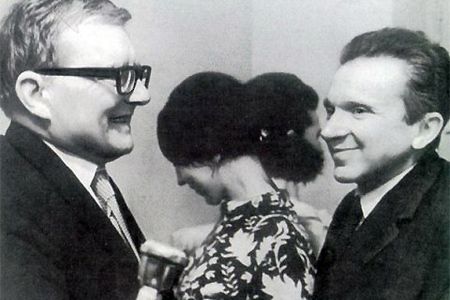

Shostakovich and Vainberg. Gyorgy Sviridov.
Source: Onyx Classics CD (my rip!)
Formats: FLAC(RAR), DDD Stereo, mp3(320)
File Sizes: 356 MB / 179 MB (FLAC version incl. cover & booklet)
The FLAC link has now expired. No more requests for this, please!
mp3 version – https://mega.co.nz/#!nAICCAgZ!ghu5cKRew9SMU_AxokxNO7SMYjyECIWRI9TPfYU gh_E
Enjoy! Don’t share! Buy the original! And please click on "Like" if you downloaded this album! 🙂
Recognised as one of the youngest and most gifted contemporary composers, Guillaume Connesson (*1970) brings
together an imaginatively diffuse range of influences, from the riches of the musical traditions of his native France to
John Adams, Steve Reich and the funk of James Brown. During the composition of the works making up the Cosmic
Trilogy, Connesson also drew inspiration from such sources as the paintings of Kandinsky and the physics of
Stephen Hawking. After first discovering Connesson’s music in 2001, St???phane Den???ve remarked on its ‘amazing
orchestration… the quality of writing for large orchestra on the level of a Ravel or Stravinsky!’ During his tenure at the
Royal Scottish National Orchestra Den???ve regularly championed Connesson’s works and two parts of the
Cosmic Trilogy, ‘Aleph’ and ‘Une lueur dans l’???ge sombre’, were commissioned by the RSNO. These are dedicated
to Den???ve; in fact, the symphonic dance ‘Aleph’ was a marriage gift.
The Cosmic Trilogy evokes three moments in the history of the universe: the Big Bang in ‘Aleph’, the appearance
of light and the stars in ‘Une lueur dans l’???ge sombre’, and finally the explosion and death of a star in ‘Supernova’.
Connesson’s works have been quickly appreciated by music lovers and performers for the exciting vitality they imbue,
and the easy-going tonal strains that permeate them. The Guardian described the work as ‘bright-toned and imaginatively
scored… crowd-pleasing, colourful music’. Chandos is delighted to present the first recording of the complete trilogy.
Guillaume Connesson studied piano, history of music, choir analysis and direction at the Conservatoire National de
R???gion de Boulogne-Billancourt, as well as orchestration at the Conservatoire National de Paris. He is currently
professor of orchestration at the Conservatoire National de R???gion d’Aubervilliers.
Music Composed by Guillaume Connesson
Played by the Royal Scottish National Orchestra
With Eric LeSage (piano)
Conducted by St???phane Den???ve
"Guillaume Connesson belongs to a generation of European composers that emerged late in the
twentieth century whose work can be genuinely called cosmopolitan; it is practically unimaginable
that, purely on the basis of the music on this album, a listener would be able identify its composer
as French. Whether or not that is necessarily a good thing is a matter of debate; historically, it has
generally been possible to situate composers to some extent on the basis of their style and
idiosyncracies, but given the easy availability of virtually every type of music ever recorded, it’s
perhaps inevitable that the cross-pollination of influences would eventually produce amalgams with
so many diverse influences and characteristics that they are impossible to pin down. It would be
possible to dismiss Connesson’s music as derivative and eclectic if they were not composed with
such skill and if it were not so attractive. The composer cites as his influences Couperin, Wagner,
Richard Strauss, Debussy, Ravel, Messiaen, Dutilleux, and film composers like Bernard Herrmann
and John Williams. It’s the last whose work springs most immediately to mind when listening to
Connesson; the bulk of the CD is devoted to his Cosmic Trilogy, and it’s hard to ignore the
influences of Williams’ space soundtracks, even though this music is developed with considerably
more sophistication and creativity. Connesson’s work may ultimately sound like film music, but
very, very fine film music. He is an exceptionally gifted orchestrator, and his music is wonderfully
colorful and dramatically varied. The Royal Scottish National Orchestra, with whom the composer
has had a long relationship, plays with polish and sparkle under St???phane Den???ve, and Eric le
Sage brings finesse to the piano part in The Shining One. The sound of Chandos’ SACD is
clean and brilliant."
All Music
Source: Chandos Records CD (my rip!)
Formats: FLAC(RAR), DDD Stereo, mp3(320)
File Sizes: 210 MB / 126 MB (FLAC version incl. cover & booklet)
The FLAC link has now expired. No more requests for this, please!
mp3 version – https://mega.co.nz/#!yJpknCJK!ETbH_zpvxftJJjO1EKVl_3XpVjDcbCsn9X12NsR mWvE
Enjoy! Don’t share! Buy the original! And please click on "Like" if you downloaded this album! 🙂
———- Post added at 08:31 AM ———- Previous post was at 08:28 AM ———-
I would really like to listen to this fascinating CD. I would really appreciate a FLAC link. Thanks a lot in advance & keep up the good work.
———- Post added at 08:36 AM ———- Previous post was at 08:31 AM ———-
I would appreciate your sending me the FLAC link to the Chandos Farrar CD. Thank You Very Much..
Gottfried von Einem (1918-1996), one of the most distinguished contemporary Austrian composers, was
born in Berne, the son of the Austrian military attach???, descended from a family with a long military tradition.
His father retired in 1918 and acquired a property at Malente-Gremsm???hlen, not far from Hamburg. and it was
here that his early musical ambitions became evident, encouraged by piano lessons and the playing of duets
with his younger brother, who was to be killed in the war, and by the present of a score of Beethoven’s Ninth
Symphony, a stimulus to the attempted composition of a symphony. Schooling at Pl???n Gymnasium brought the
unappreciated chance of performance in Hindemith’s Pl???ner Musiktag, but, as von Einem was later to remark,
his loyalty to Bach blinded him to the importance of the occasion. His later education was at Ratzeburg, where
he took his Abitur, and briefly, for language, in England.
Von Einem’s musical career began when he was employed in 1938 as a coach at the Berlin Staatsoper and the
Bayreuth Festspielhaus. As a composer he owed much to Boris Blacher. with whom he studied from 1941 to
1943. Blacher was to provide libretti for a number of von Einem’s operas, Dantons Tod, adapted from
B???chner and first performed at Salzburg in 1947, Der Prozess, derived from Kafka and completed in 1953,
Der Zerrissene, staged in Hamburg in 1964, and Kabale und Liebe in 1975. The association with Blacher
may have contributed to von Einem’s arrest by the Gestapo and the accusation of Kulturbolschewismus that
followed the performance of his Concerto, written for von Karajan in 1944, a work that included jazz variations
that seemed offensive to the r???gime. To this may be added the suspicions entertained by the authorities of one
who was, by birth and marriage, closely connected with aristocratic conspirators against Hitler. His interrogation
and detention was brief, although it may have suggested elements in the later opera Der Prozess, and a
friendly doctor was able to prevent his despatch to the Front.
1944 brought von Einem praise for his ballet Prinzessin Turandot and appointment as musical adviser and
resident composer to the Dresden Staatsoper. Success at Salzburg after the war, with the opera Dantons Tod,
brought a closer association with the Festival, as a member of the Board in 1948 and later as chairman of the Festival
Kunstrat. He was subsequently to play a leading part in the Vienna Festival and from 1965 to occupy the position
of Professor of Composition at the Vienna Musikhochschule.
The works on this album, Wiener Symphonie (Vienna Symphony), Symphonische Szene (Symphonic Scenes)
and the Tanz-Rondo (Dance-Rondo) are all in von Einem’s trademark neo-classical style.
Music Composed by Gottfried von Einem
Played by the Philharmonisches Staats-Orchester Frankfurt/Oder
Conducted by Nikos Athin???os
Source: Signum Records CD (my rip!)
Formats: FLAC(RAR), DDD Stereo, mp3(320)
File Sizes: 292 MB / 164 MB
The FLAC link has now expired. No more requests for this, please!
mp3 version – https://mega.co.nz/#!SUpXGKxD!RQ9pB5IqK2Y_wxPzQUCaWotifj-bSyOKr-pBrdY4lDc
Enjoy! Don’t share! Buy the original! And please click on "Like" if you downloaded this album! 🙂
English composer Grace Williams’s Symphony No.2 is an absorbing work whose mix of styles and
models serves as a reminder that pluralism in music is not just a phenomenon of the years since 1980.
The symphony begins by evoking Shostakovich and Vaughan Williams but, by the finale, it is a late-
romanticism recalling both Wagner and Mahler that provides the source for Williams’s most powerful
utterances, before the final ‘return to earth’ – and to echoes of Vaughan Williams.
Something of the symphony’s stylistic blend, with its inherent and persistent tensions, can also be
heard in the Ballads for Orchestra. This is music with a strong narrative drive, full of incident and
sturdily constructed, but Ballads and the symphony are quite heavily scored. These orchestral
compositions reveal a distinctive personality, but Williams is still more impressive in the neo-Straussian
opulence of Fairest of Stars, a setting of Milton whose vocal line seems to reflect the wonder and
ecstasy of Ariadne auf Naxos. At the same time, the composer’s familiarity with Britten’s music is
also recalled in certain turns of phrase. Fairest of Stars has a symphonic expansiveness, yet the
rich instrumental commentary never impedes the vocal part.
Music Composed by Grace Williams
Played by the BBC National Orchestra of Wales and the London Symphony Orchestra
With Janet Price (soprano)
Conducted by Vernon Handley & Charles Groves
"No one but a heartless curmudgeon would deny Welsh composer Grace Williams the
69 minutes and 15 seconds it takes to listen to this disc. Each of the three works here —
the Second Symphony from 1956, the Ballads of Orchestra from 1968, and "Fairest of
Stars," a setting for soprano and orchestra of lines from Milton’s "Paradise Lost" from
1973 — is clearly deeply sincere and all of them employ conventional orchestral gestures
and a traditional tonal language to articulate serious thoughts and express significant
emotions. The symphony is in four movements: a pugnacious opening Allegro marciale,
a pastoral Andante sostenuto, a hard-driving Allegro scherzando, and a brooding Largo
finale with a surprisingly upbeat coda. The Ballads, likewise in four movements, are
combined in a suite of pieces connected by their evocative tone and programmatic content.
"Fairest of Stars," a quarter-hour, single-movement work, uses virtuoso soprano writing
to invoke the rapture of Milton’s hymn to creation. The performers — Vernon Handley
and the BBC Welsh Symphony for the Ballads and Charles Groves and the London
Symphony with soprano Janet Price for the symphony and the Milton setting — are
manifestly doing their best to make the case for Williams’ music. The extent to which
they succeed will depend on the listener. Those who know and love their Vaughan
Williams may find Grace Williams interesting."
All Music
Source: Lyrita Records CD (my rip!)
Formats: FLAC(RAR), ADD Stereo, mp3(320)
File Sizes: 345 MB / 158 MB (FLAC version incl. artwork & booklet)
The FLAC link has now expired. No more requests for this, please!
mp3 version – https://mega.co.nz/#!SRgllToY!2CsNLUFyth0u0vI2JpWJ_IA-z_6xy4AWT3Pq3AxcPxE
Enjoy! Don’t share! Buy the original! And please click on "Like" if you downloaded this album! 🙂
Rumon Gamba and the BBC National Orchestra of Wales present a collection
of rarely heard overtures from the British Isles. Among these is Sir Frederic Cowen’s
The Butterfly’s Ball (1901), illustrating a popular children’s poem by William Roscoe.
All is vividly evoked by Cowen’s pleasing melodic lines and delicate instrumental colour.
It is easy to see why, in its day, the piece was a firm favourite, being played twenty-
six times at the Proms between 1900 and 1940. Samuel Coleridge-Taylor achieved
immediate success early in his career with his four-part cantata cycle collectively known
as Scenes from The Song of Hiawatha. The Overture, composed in 1899, was intended
as a prelude to the complete cycle but is now rarely heard in this context. Indeed, very
little of the material in this Overture comes from the other Hiawatha pieces, the principal
theme being the spiritual ‘Nobody knows the trouble I see, Lord’. Perhaps better known as
a leading baritone of his generation, Frederic Austin was also a composer of some
achievement. In his tuneful and exciting concert overture The Sea Venturers, from
1936, he wanted to evoke ‘something of the lives and character of English seamen who…
took peril and pleasure as it came’.
Other works in this collection:
Sir Granville Bantock: The Frogs
Henry Balfour Gardiner: Overture to a Comedy
Sir Arthur Sullivan: Overture to "Macbeth"
Sir Charles Villiers Stanford: Overture to Odypus Tyrannus, op.29
Sir Alexander Mackenzie: Overture to "The Little Minister"
Music by [see above]
Played by the BBC National Orchestra of Wales
Conducted by Rumon Gamba
"This disc is an out-and-out winner. Moreover, it’s an excellent example of what the recording
industry can do at its best. Rumon Gamba and Chandos have put together a programme of
largely-forgotten British overtures which, as these performances show, do not deserve to
be forgotten.
The programme once assembled, it has been performed with zest and great accomplishment
by Gamba and the BBC NOW. Chandos has recorded the performances in splendid, full-
blooded and detailed sound and then issued them with thorough documentation, including
informative notes by Lewis Foreman and a nice little essay by the conductor. The only tiny
criticism is that it’s a mild frustration that Mr Foreman’s notes about each piece aren’t laid
out in the order in which they’re played. If that’s the only criticism – and it is – then it must
be a fine disc.
I attended a full performance of Coleridge-Taylor’s The Song of Hiawatha at the 2013 Three
Choirs Festival (review) so I was interested to hear the overture. Lewis Foreman says in his
notes that the overture is a separate work, rarely heard as the preface to the complete
trilogy. In that respect it reminds me of the relationship between Dyson’s overture, At the
Tabard Inn and The Canterbury Pilgrims. The similarity falls down, however, when one
considers the musical material for Dyson’s overture is based on themes from the choral work
whereas, as Mr Foreman points out, Coleridge-Taylor makes virtually no thematic reference
to his cantatas. Instead the main thematic material is the spiritual ‘Nobody knows the trouble
I see’, which is heard early on from the violins (1:12). The overture is a thoroughly engaging piece.
More serious in countenance is Stanford’s Prelude to Oedipus tyrannus. This derives from
incidental music for a theatrical production of Sophocles’ play in Cambridge. Was this, I wonder,
one of the annual productions of Greek plays at the university that a few years later prompted
Vaughan Williams’ The Wasps? Lewis Foreman tells us that Stanford’s Prelude brings together
various elements from the incidental music. These include a noble string melody, heard twice,
and a haunting cor anglais theme which is also given a second airing. It’s an impressive piece.
Also quite dramatic at times is Sullivan’s Overture to Macbeth, composed as part of the incidental
music for a production by Sir Henry Irving of Shakespeare’s play. Austin’s The Sea Venturers
is a splendid opener to this programme. The music in the outer sections is sometimes turbulent,
always lively, while the calmer central section includes a delightful singing tune which has a very
English accent. It’s a very colourful, attractive piece in the course of which swashes are buckled
at times.
The remaining pieces are lighter in tone. Cowen’s The Butterfly’s Ball is bubbling and vivacious;
it’s also delightfully scored. Once a Proms favourite, it has fallen into complete neglect since the
composer’s death. I fear that the title alone has probably worked against it in the more “hard-
headed” times since the 1930s but that’s a great pity for this is a piece full of innocent enjoyment.
It’s a charming example of lighter British music at its best.
The Bantock overture is colourful and good humoured. This spirited piece is given a performance
to match. Mackenzie’s overture was part of his incidental music to a pre-Peter Pan play by
J.M. Barrie, to whom the piece is dedicated. The thoroughness of Chandos’ documentation even
extends to naming the dedicatees of pieces. The play depicts, rather innocently, I should imagine,
life in a Scottish village and the music is shot through with ‘Scottishness’. Balfour Gardiner’s
overture is frolicsome and entertaining. Lewis Foreman says that Gardiner was so self-critical that
he was prone to destroying many of his scores after their first performances. I’m glad this one
escaped his self-destructive tendency.
Has this disc unearthed any neglected masterpieces? No. Does it contain enjoyable, well-crafted
pieces that deserve to be better known? Emphatically, yes. This disc is a delight from start to
finish, both in terms of the music and the performances. We know that the BBC NOW is an
accomplished orchestra; there’s not just accomplishment in evidence here but also a palpable
sense that they’re having a thoroughly good time. Rumon Gamba conducts sparkling performances.
In his engaging note in the booklet Gamba says that he and Chandos compiled a very long list
of candidate works for this disc and then whittled the list down significantly. He more than drops
a hint that he’d be open to the idea of a Volume 2. Yes please."
Musicweb
Source: Chandos Records CD (my rip!)
Formats: FLAC(RAR), DDD Stereo, mp3(320)
File Sizes: 326 MB / 186 MB (FLAC version incl. cover & booklet)
The FLAC link has now expired. No more requests for this, please!
mp3 version – https://mega.co.nz/#!SBg2CZTb!Fw6tpwVBY05iPgRLJhDsBWlRyo69YntInL0-48qegy8
Enjoy! Don’t share! Buy the original! And please click on "Like" if you downloaded this album! 🙂
No.691 http://i8.photobucket.com/albums/a29/wombat65/grammy_zps63cf5efc.gif http://i8.photobucket.com/albums/a29/wombat65/music_zpsfb50393c.gif
Gustav Holst’s youthful enthusiasm for Wagner is reflected in his ebullient Walt Whitman
overture written in 1899. Shortly afterwards he composed the Cotswolds Symphony which
embraces hints of contemporary British folk music but is dominated by the slow movement, a profound
elegy for the utopian socialist William Morris. Though completed at college, A Winter Idyll shows
real orchestral assurance. Indra is an accomplished tone poem revealing Holst’s interest in the legends
of India, whilst the glittering and evocative Japanese Suite was written in response to a request
from a Japanese dancer appearing in London.
Music Composed by Gustav Holst
Played by the Ulster Orchestra
Conducted by Joann Falletta
"Ulster Orchestra set to emerge with short-term rescue package and five-year plan
A plan to secure the immediate future of the Ulster Orchestra was reportedly agreed
yesterday as part of the Northern Ireland executive’s January monitoring round, which
reallocates money between Northern Ireland’s government departments within the
financial year.
This short-term measure will be succeeded by a new deal which reports suggest might
even include money from the UK Treasury, as well as funds from Northern Ireland’s
finance and culture departments.
Winding up the orchestra’s activities by the end of the current financial year was
being treated as a serious possibility, and its executive chairman, Sir George Bain,
spent recent months making public pleas for support. A rescue package amounting
to ???500,000, as well as a plan for the future, was required to prevent the orchestra’s
closure, he said.
As chairman, Bain has overseen the departure of several chief executives and multiple
members of staff. After Rosa Solinas resigned in March 2014, he took on the role
of executive chairman. Trevor Green, former managing director of the Melbourne
Symphony Orchestra, has in recent months been working in the administration
as a special executive.
A campaign, Save The Ulster Orchestra, last year presented a petition of nearly
14,000 signatures to Car???l N??? Chuil???n, the Northern Ireland Assembly minister
for culture, arts and leisure.
CM has asked for further information on the new arrangements, details of which
have not yet been released by the orchestra or Northern Ireland Executive."
Alex Stevens, Classical Music Magazine – January 16, 2015
Source: Naxos CD (my rip!)
Formats: FLAC(RAR), DDD Stereo, mp3(320)
File Sizes: 281 MB / 151 MB (FLAC version incl. cover & booklet)
The FLAC link has now expired. No more requests for this, please!
mp3 version – https://mega.co.nz/#!XEwQBLRC!0RWW2Tz7jpfkOGdohdTKsbfWw-Z6EzEc4t7uaWVESdg
Enjoy! Don’t share! Buy the original! And please click on "Like" if you downloaded this album! 🙂
Hyperion’s mini-series of Sir Granville Bantock’s orchestral music has won innumerable
plaudits from press and public alike since the Hebridean and Celtic Symphonies appeared on
CDA66450 in 1991. This fifth CD will add weight to the growing feeling that the rich and romantic
music of this composer should be heard more often than it is. All six of the pieces on this disc are
first recordings. The major work is Thalaba the Destroyer, based on a poem by Victorian
Poet Laureate, Robert Southey. This is the work’s first performance since 1901???and only its fourth
performance ever. Thalaba the Destroyer reflects Bantock???s then enthusiasm for Tchaikovsky, who
provided him with an expressive language to tell an exotic tale.
Music Composed by Granville Bantock
Played by the Royal Philharmonic Orchestra
Conducted by Vernon Handley
"Another exemplary addition to Handley’s absorbing Bantock series ??? Hearty thanks
to all involved in this enterprising labour of love."
Gramophone
"The heady soundscapes and chromatic opulence all make for a good wallow ???
gorgeous from start to finish."
The Guardian
"His orchestration is fabulously colourful, his melodies strong and memorable,
and his sense of drama would make Hollywood composers envious ??? Caristiona
is hauntingly beautiful, Omar Khayyam is full of exotic allure (with real camel bells),
and Thalaba may be hokum, but of the best quality. Stunning performances."
Classic FM Magazine
Source: Hyperion Records CD (my rip!)
Formats: FLAC(RAR), DDD Stereo, mp3(320)
File Sizes: 305 MB / 179 MB (FLAC version incl. cover & liner notes)
The FLAC link has now expired. No more requests for this, please!
mp3 version – https://mega.co.nz/#!iZIRWIpa!a2ZqkEaX6fkvO46PxXvlyY3XS4b6vN2hSJOcNej Q5PQ
Enjoy! Don’t share! Buy the original! And please click on "Like" if you downloaded this album! 🙂
First: have you noticed how certain works, musical or visual, have an uncanny knack fo
r perfectly evoking the period when they were created? That’s one of the distinguishing
features of the wonderful music on this new disc. Don Gillis’s Symphony No.6 sounds
exactly like the late 1940’s, much the same way that classic post-war movies conjure that
period. In fact, the Symphony No.6 might be the most cinematic of all of Gillis’ works
in that form, with a wonderful sense of tension in the first movement that would be right
at home on the soundtrack of "The Big Sleep" or "This Gun for Hire." The second movement is
full of excitement, like a modern analog to the scherzo of the Mendelssohn Scottish
Symphony. The bluesiness of the third movement recalls Gershwin at his most relaxed,
and the boisterous final movement with its cushy harmonies proves that Gillis had a lot in
common with the great Broadway and Hollywood arrangers. The Symphony No.5 is probably
the most "serious" of his symphonic output, reflecting the mood of the immediate postwar
era. This contains one of his most beautiful slow movements (and if you’re an ongoing fan
of this series, you know how effective his quiet moments are); the keening sense of nostalgia
often bears a striking resemblance to Bernard Herrmann (think in terms of his scores for
"The Devil and Daniel Webster" or "The Ghost and Mrs. Muir"). The strictly "fun" piece of the
collection is the Paul Bunyan Overture, full of rollicking spirits but, again, with a more
contemplative sound.
Music Composed by Don Gillis
Played by the Sinfonia Varsovia
Conducted by Ian Hobson
"The folk-like and openly patriotic elements of Don Gillis’ big-hearted orchestral works
are perhaps their most obvious characteristics — over-emphasized in this CD’s flag-
waving cover art — though close listening to the music brings out many subtler qualities,
such as the composer’s expansive lyricism, his keen ear for orchestration, his contrapuntal
dexterity, his great rhythmic variety, and his rather sophisticated approaches to tonality
and harmony. Gillis is jovial and broadly humorous in Paul Bunyan: An Overture to a
Legend (1964), a fine piece in the populist vein, but his darker, introspective side is fully
displayed in the brooding Symphony No. 6: Mid-Cenury U.S.A. (1948), a work
reminiscent in some ways of Roy Harris’ great Symphony No. 3. If, after hearing this
work, any doubt remains of Gillis’ depth of feeling, then the elegiac Symphony No. 5:
In Memoriam (1945) will persuade the listener of his gravitas and skill in conveying
tragic emotions, even in the midst of optimistically lyrical themes and sometimes
heavy-handed rhythmic evocations of war. The Sinfonia Varsovia, conducted by Ian
Hobson, is marvelously textured and richly shaded in these premiere recordings, and
Albany has outdone itself in providing the best engineering and natural sound
reproduction. Highly recommended for fans of Americana."
All Music
Source: Albany Records CD (my rip!)
Format: DDD Stereo, mp3(320)
File Sizes: 158 MB (incl. cover & liner notes)
No FLAC version of this album available!
mp3 version – https://mega.co.nz/#!XYpEVDYR!wtlYsPrTSGsIfhAJ2JEDxT_7GLK8PsJ8OmbMHqJ crrY
Enjoy! Don’t share! Buy the original! And please click on "Like" if you downloaded this album! 🙂
Largely self-taught as a musician, Harold Truscott (1914-1992) spent much of his life as a
lecturer in music in Huddersfield. His compositions were largely neglected in his life-time, leading
him to write very considerably for the piano and for chamber ensemble, where performance was
more probable. He was, however, a natural orchestral composer, with a fine command of the
resources of the orchestra, writing, as always, in an unfashionably approachable style, which
can only now be appreciated.
Music Composed by Harold Truscott
Played by the RT??? National Symphony Orchestra of Ireland
Conducted by Gary Brain
"During his lifetime Harold Truscott (1914-92) was known to a good many as a
teacher and as a perceptive and truculent critic, as a composer to very few.
Performances were rare, most of his music remains unpublished. Of the works
on this record the Suite was given a mere run-through by a youth orchestra,
the Symphony here receives its first complete performance, and the very
existence of the Elegy was unsuspected until an examination of Truscott’s
papers after his death revealed dozens of works that even the composer
himself had omitted from his catalogue.
The Symphony seems to date from the late 1940s, and it is intriguing to
speculate how it would have fared if it had been performed then. Not too
well would be my guess: it sounds neither English nor ‘modern’, and its
references to Nielsen, Bruckner and Mahler (roughly in that order, with
perhaps a hint or two of Franz Schmidt on whose music Truscott was an
authority) would have puzzled an audience largely ignorant of them.
Now it seems like a work of considerable power and eloquence, with a
personal voice clearly audible above those ‘quotations’ (they sound
more like that than influences). Guy Rickards’s note on the work and
a pair of superscriptions in Truscott’s piano reduction of the Symphony
suggest that it has a religious ‘programme’. The doomed processional
of the first movement, the combination of Shostakovich-like humour
and malign grimness in the central scherzo and the progress of the
finale from a cold funeral march to a bleakly tragic coda make this
seem likely: a ‘Good Friday Symphony’, perhaps. As Truscott’s only
completed symphony it has remarkable assurance in its handling of
the orchestra and its ability to build structures of real scale and
grandeur.
The Elegy is earlier, but also symphonic in the size of its gestures.
It is formally less sure than the Symphony. but striking in its range
of mood, from sad gravity to rich lushness, from sober to impassioned
eloquence. The diminutive Suite is slighter than these other works,
but an echo of them is heard in the slow movement (nearly as long
as the other three movements put together), suggesting that Truscott
was happiest writing in symphonic dimensions. With no likelihood
of an orchestral symphony being performed he devoted himself
instead to sonatas, over 20 of them for his own instrument, the
piano. I was so impressed by this orchestral collection that I sought
out some of those sonatas (Peter Jacobs has recorded eight of them
on Altarus and two more cassette only—for the British Music Society)
and am now more than half inclined to found a Truscott Society, if
there isn’t one already. His frequent references to the language of
other composers may be disconcerting at first (the Sixth Sonata
would be well-nigh incomprehensible to anyone ignorant of Beethoven),
but he uses them as a particular sort of writer uses quotations, as part
of his subject-matter as well as of the natural discourse of an extremely
well-stocked mind. He refers to Bruckner in the Symphony’s finale in
much the same way that Edith Sitwell quoted Donne in her ”Still
falls the rain”, and to much the same moving effect."
Gramophone
Source: Marco Polo CD (my rip!)
Formats: FLAC(RAR), DDD Stereo, mp3(320)
File Sizes: 241 MB / 143 MB (FLAC version incl. cover & booklet)
The FLAC link has now expired. No more requests for this, please!
mp3 version – https://mega.co.nz/#!r9hQmahB!QMrGqR1zvaxB-MaWUl2d6em-QL8WRLiSj_wU96UKdcI
Enjoy! Don’t share! Buy the original! And please click on "Like" if you downloaded this album! 🙂
L???on Minkus was born Alois Ludwig Minkus in 1826 in Vienna, where he is presumed to have studied.
A violinist, conductor and composer, he was said to be of Hungarian origin, although by ancestry of Russian
or Polish derivation. His first excursion into the world of ballet was in a collaboration in 1846 for Paris with
Edouard Delvedez, Paquita, staged at the Op???ra with Carlotta Grisi and Lucien Petipa. The latter’s brother
Marius Petipa took the work to St Petersburg for his d???but there in 1847, commissioning a Pas de trois and
a Grand pas from Minkus, two pieces that survive in modern Russian repertoire. By the early 1850s Minkus
had moved to Russia. From 1853 to 1856 he directed the orchestra of Prince Yusupov, appeared as a soloist
and taught the violin. In 1861 he became a solo violinist at the Bolshoy Theatre in Moscow, serving as
conductor of the orchestra for ten years from 1862 and for much of this time as ballet composer to the
theatre. From 1866 he taught the violin at the Moscow Conservatory and served as inspector to the
orchestras of the imperial theatres. In 1872 he moved to St Petersburg as ballet composer to the
imperial theatres, a position he held until his retirement in 1891. He finally returned to Vienna,
where he died in 1917.
Originally a ballet with a prologue and three acts, Don Quixote was mounted at the Bolshoy Theatre
in Moscow. The form of the original novel, in which Don Quixote, deluded by his reading of tales of chivalry,
sets out to right the perceived wrongs of the world, with misadventure after misadventure, has made it
inevitable that any stage treatment has had to be selective in its choice of episodes. For his ballet Marius
Petipa chose, like Mendelssohn, to centre his scenario on Camacho’s wedding, in the second part of the
novel, using Don Quixote and his squire Sancho Panza to provide a unifying theme.
Music Composed by L???on (Ludwig) Minkus
Played by the Sofia National Opera Orchestra
Conducted by Nayden Todorov
"As one would expect from a ballet by Minkus, Don Quixote is full of lively dances and
attractive melodies, all of it well crafted and colourfully orchestrated, if without the genius
of Tchaikovsky and Delibes. That said, it makes for undemanding, entertaining listening,
with its dashes of Spanish colouring (the Spanish dances are especially attractive) and
plenty of character dances, such as the Sailor’s Dance in Act II, to enjoy. The performance
is lively and sympathetic and the recording reasonably good (it lacks a certain richness)…
At the price, admirers of both light music and ballet should not hesitate: there is plenty
to enjoy here."
Penguin Classical Guide
Source: Naxos CDs (my rip!)
Formats: FLAC(RAR), DDD Stereo, mp3(320)
File Sizes: 606 MB / 311 MB (FLAC version incl. covers & booklet)
The FLAC link has now expired. No more requests for this, please!
mp3 version – https://mega.co.nz/#!exY1xAKZ!nHRyFCvLTyRjkaP7mNiHLwdHSIlET494NtI9Ndp gmgI
Enjoy! Don’t share! Buy the original! And please click on "Like" if you downloaded this album! 🙂
In his early years, German composer Heinrich von Herzogenberg (1843-1900) was in the New German
School of Liszt and Wagner and, after a several-year period of soul-searching when he composed nothing,
decided to move back to the conservative, traditional camp of Brahms and his followers. Almost everything
we’ve heard from Herzogenberg has been after his “return to Brahms”; the Odysseus Symphony, however,
is his last programmatic work from the early period. Dating from 1872, it’s a 48-minute work in four movements:
“The Wanderings”, “Penelope”, “The Garden of Circe” and “The Banquet of the Suitors”. Affinities with Wagner
are everywhere with several citations or references to three Wagner operas and leitmotifs for Odysseus and
Penelope are important elements of three of the four movements.
The Violin Concerto was written for Joseph Joachim, who, after tortuous years of consultations
with Herzogenberg, never performed it and it was never printed. Finished in 1889, its three movements
last 32 minutes. The work stands out for its lyricism throughout the first two movements; no dramatic
confrontations or antagonistic musical struggles here. The final movement is a lively, dance-like movement
which adds some athleticism and energy to the beauty of the first two.
Music Composed by Heinrich von Herzogenberg
Played by the Deutsche Radiophilharmonie Saarbr???cken Kaiserslautern
With Ulf Wallin (violin)
Conducted by Frank Beermann
"Nobody would call Odysseus a perfect work; but it’s highly enjoyable and
fairly brimming with talent…The later, very different Herzogenberg is represented
by the Violin Concerto…a lovely, predominantly lyrical work…the orchestra and
Frank Beermann sound as if they are enjoying themselves throughout, as
well they might."
International Record Review
http://i8.photobucket.com/albums/a29/wombat65/herzog_zps7b8835ab.gif
Source: CPO Records CDs (my rip!)
Formats: FLAC(RAR), DDD Stereo, mp3(320)
File Sizes: 323 MB / 185 MB (FLAC version incl. covers & booklet)
The FLAC link has now expired. No more requests for this, please!
mp3 version – https://mega.co.nz/#!O4YiQQzK!mjWIDfruVDTTwi9wuw1jyELT6BTAoVth1Z0Ltye D1l4
Enjoy! Don’t share! Buy the original! And please click on "Like" if you downloaded this album! 🙂
Cheers and Thanks for sharing!!!
Gareth Farr ONZM (born 29 February 1968) is a New Zealand composer and percussionist. He
has released a number of classical CDs and composed a number of works performed by the New
Zealand Symphony Orchestra (NZSO) and Royal New Zealand Ballet. He has also performed in drag
under the name Lilith LaCroix in a show called Drumdrag and has also released a CD under that name.
Farr became the composer in residence with Chamber Music New Zealand at 25, the youngest person
to hold that post. In 1994, he had four works commissioned for the 1994 International Festival of the
Arts including Lilith’s Dream of Ecstasy and works for flautist Alexa Still and pianist Michael Houstoun
as well as a ballet. In 1996 he signed to music publisher Promethean Editions becoming a founding
house composer.
Farr comments on his work Te Papa (Our Place): "The thing that struck me about [the
anonymous 19th century poem] "Charm" when I first read it, was the wonderful concept of the
spirit of the land – te wairua o te whenua. The land is our mother, she cares for all of her children.
We have all at some point in time been a stranger to this land, and as visitors, we have all been
welcomed by her. "Charm is a poem from a time when all Europeans were recent visitors to the
land. It is likely, however that this poem was a Maori charm originally, translated into English
by settlers, suggesting that Maori also felt the same way about Aotearoa. We now live in a unique
multi-cultural society. Our many and varied contemporary art forms reflect this fact, and display
something that could only be created here. This piece is a recognition of the similarities and
differences of all of the cultures of New Zealand. It is a musical analogy to my idea that cultures
can co-exist without overshadowing or changing one other. And finally, it is a musical
celebration that we all have ended up here on the same soil."
This album contains the original Te Papa as well as two abridged remixes, a "Log drum ‘n’
bass mix" and an "Urenui Mix".
Music Composed by Gareth Farr
Played by the New Zealand Symphony Orchestra
With Mere Boynton (karanga) & Virginia-Marie Stack (mezzo-soprano)
And Simon O’Neill (tenor)
Conducted by Kenneth Young
"In this CD single we get three different ‘takes’ on Farr’s piece Te Papa (our place).
The first is the full orchestral version. Over a thunder of drums an ecstatic Hadley-
like line is sung by tenor and soprano- a setting from Charm – an anonymous New
Zealand Poem. This music is suggestive of a sort of Maori Song of the High Hills
(Delius) though more earthy – not so ethereal. The collision of cultures (wild Maori
cries meshing with the English choral tradition) works far better than I would have
guessed. There is plenty of visceral excitement on offer. Te Papa seems to protest
a world in turmoil and the movement of great tectonic plates. There is a touch of
Orff about this music: simple but magnificent. The first two versions are exciting.
The third version involves a ‘funky’ 1970s disco-beat underpinning the Maori
strangeness with burbles and gurgles."
Musicweb
Source: Morrison & Co Music Trust CD (my rip!)
Formats: FLAC(RAR), DDD Stereo, mp3(320)
File Sizes: 102 MB / 44 MB
The FLAC link has now expired. No more requests for this, please!
mp3 version – https://mega.co.nz/#!itoxCDBQ!A7X9Zvi_S3qipTDCE_OABLZuUxCytKEWvJ6Op8V fFsI
Enjoy! Don’t share! Buy the original! And please click on "Like" if you downloaded this album! 🙂
This second Toccata Classics recording of music by Philip Spratley, born in Nottinghamshire
in 1942, opens with the atmospheric orchestral suite Cargoes, inspired by John Masefield’s famous
poem, and continues with a sparkling folksong medley based on fiddle tunes by another poet, John Clare.
The main work here, Spratley’s Third Symphony (Sinfonia Pascale), which had its initial impulses
in visits to North Wales and Jerusalem, traces a path from tension to triumph.
Music Composed by Philip Spratley
Played by the Siberian Symphony Orchestra
Conducted by Dmitry Vasiliev
"Inspired by Masefield’s poem of the same title, Cargoes (2010–12) is described by the
composer as “three songs without words.” The title of each movement is the first word
or words of the relevant stanza of Masefield’s poem. The first movement, “Quinquerreme,”
has a sort of Impressionism, yet is not particularly French (at least not to begin with).
What emerges quickly is Spratley’s keen ear for orchestration and his ability to build truly
lovely sonorities. The Impressionist aspect does in fact blossom into what sounds to me
like a reminiscence of or reference to Debussy’s La mer ; counterpointing this is the
characteristically English breadth, and accent, to some of the long-breathed melodies.
The densely (but not over-) scored opening to the central panel (“Stately Spanish
Galleon”) thins to the British pastoral that Ingram identified in the earlier review. There
is some lovely woodwind playing here from the Siberian players, beautifully balanced
in recording terms. Glowing string chords recall Vaughan Williams. The Finale, a brisk
Allegro entitled “Dirty British Coaster,” includes the rather nice touch of the sudden
arrival of an orchestral piano.
There is not enough gap between Cargoes and the next piece, the “free rondo” A Helpston
Fantasia (2010) on the disc for one to get one’s breath. A pity, but easily remedied
if forewarned. Again there is a poetic inspiration. Helpson is a village (the notes tell us
it used to be in Northamptonshire but since 1974 is in Cambridgeshire) which houses
the John Clare Cottage and visitor centre. Spratley describes Clare (1793–1864) as
Britain’s “finest nature-poet.” Clare also collected English folk materials. Spratley
helpfully enumerates the folk tunes he used in his booklet notes. Intriguingly, this
recording also represents the work’s first performance. The piece itself is intriguing:
After the opening’s nice feeling of stately pageantry, the material becomes remarkably
varied, yet somehow manages to operate under an overarching umbrella of inevitability,
perhaps because of the underlying consistency of Spratley’s compositional language.
Some passages are reminiscent of Holst’s suites for wind band. If there is a criticism
of the performance, it is that the horn playing comes across as somewhat uncontrolled
in the solos, but this remains a fascinating piece.
The Third Symphony (2009) moves into different, altogether more rugged, territory.
The opening is heavy, reminiscent perhaps of some early 20th-century Russian
symphonists; in the more contrastive material of this first movement, though, the
English Pastoralists return. It is a most fetching mix that Spratley handles well. There
is, incidentally, some material here from a youthful essay in this genre by the composer.
The inspiration comes from a variety of sources, but most poignantly from a visit to
Jerusalem in 1967, when Spratley was exposed to the work of the architect Antonio
Barliuzzi (1884–1960) and the artist Duilio Cembellotti (1876–1966), whose church
windows show the events around the scourging of Jesus. The central movement, entitled
“Nocturne,” includes a lively Allegretto sandwiched between two lyrical Adagio s and is
beautifully managed here, particularly the final descent into silence. The Finale initially
quotes from the first movement before embarking on the concerns of its title, “Chaconny”
(which title was chosen for its echoes of Purcell). Something of the English grandeur of
old heard in A Helpston Fantasia is also encountered here. Spratley’s construction and
imagination are remarkable, and the performance is virtuosic (it is an understated
virtuoso element, true, but listen carefully and one can hear just how challenging
Spratley’s score is). The climax is highly effective and once more provides an
example of expert scoring: Even at higher dynamic levels, several lines can happily
coexist without any muddying."
Fanfare
Source: Toccata Classics CD (my rip!)
Formats: FLAC(RAR), DDD Stereo, mp3(320)
File Sizes: 335 MB / 174 MB (FLAC version incl. covers & booklet)
The FLAC link has now expired. No more requests for this, please!
mp3 version – https://mega.co.nz/#!K8ZmnBTS!eIPuXe1OnLVL-HGdh6HQqwQB0_aRZB-72gY8ojmLFM0
Enjoy! Don’t share! Buy the original! And please click on "Like" if you downloaded this album! 🙂
The four-movement Symphony No.4 ("1942") was written while George Antheil was a reporter
for the Los Angeles Daily News during World War II. The mood, intent, orchestration, and even rhythmic
approach are extremely reminiscent of the style of Dmitry Shostakovich. From the militaristic feeling of the
Moderato to the counterpoint in the bitterly ironic Scherzo, the neo-Romantic influence of the Russian
composer is strongly felt. The piece is traditionally tonal and rich with memorable melodies. On an
emotional level, it is a far cry from the music of the self-proclaimed "bad boy" of modern music (the
title of Antheil’s autobiography) who led the avant-garde of the 1920s. Virgil Thomson heard the piece
as filled "with every kind of joke, acrobatic turn, patriotic reference and glamorous monstrosity."
Antheil’s friend Leopold Stokowski premiered the work on an NBC Symphony Orchestra broadcast
in 1944, and it reportedly was one of the works that led to the parting of the ways between
Stokowski and NBC.
The optimism and earnestness that distinguish Antheil’s Fifth Symphony – in contrast to the
wartime gloom of the Third and Fourth — is characteristic of Antheil’s music of the postwar period.
The Symphony is in three movements. The first utilizes a broad palette of harmonic color; instead
of piling chords layer upon layer in the polytonal manner of his earlier works, however, Antheil
separates and juxtaposes multiple harmonic schemes to create linear variety. The second movement
is surprisingly plaintive, rivaled only, perhaps, by the lush Largo of the String Quartet No.3 as
the most introspective music of Antheil’s later years. The carnival atmosphere and playful
orchestration of the third movement earn the Fifth Symphony its "Joyous" appellation.
The novelty here is Decatur at Algiers, called a nocturne although it’s based on Stephen
Decatur conquering the Barbary pirates in the early 1800s. There’s an attractive Arabic flavour
about the spooky principal theme on the oboe.
Music Composed by George Antheil
Played by the HR Sinfonieorchester
Conducted by Hugh Wolff
"The Antheil centenary boom goes on with further convincing advocacy from Hugh Wolff
and his Frankfurt team. (For Symphonies Nos 1 and 6, see 11/00.) No 4, written in the
worst years of the war, gets an ebullient performance which, for me, has the edge
over the Ukranians since the recorded sound is richer. The music employs juxtapositions,
exactly like cinematic cuts, that have little to do with symphonic development and are
less dominated by Stravinsky than some of Antheil’s earlier works. The tunes are
memorable.
This release also brings the Fifth Symphony – first recorded by the Vienna Philharmonia
under Herbert Haefner in 1952 – back into the catalogue. This is a war symphony too.
Antheil lost his brother in the conflict and dedicated the symphony to ‘the young
dead of all countries who sacrificed everything’.
The first movement is continuously bustling in an idiom which crosses Stravinsky
with jazz: it works. The Adagio molto is an elegiac siciliano, and the finale is a pot-
pourri which raises constant echoes – that’s how musical kleptomania operates.
Almost at the start Antheil recalls the opening of Shostakovich’s Fifth in homage
to America’s wartime ally. These are all fine performances, well recorded too –
another impressive case for later Antheil on his own terms."
Gramophone
Source: CPO Records CD (my rip!)
Formats: FLAC(RAR), DDD Stereo, mp3(320)
File Sizes: 319 MB / 145 MB (FLAC version incl. covers & booklet)
The FLAC link has now expired. No more requests for this, please!
mp3 version – https://mega.co.nz/#!21gmjZ7Z!HXOeoaAHfPF_lIW9zXc508CGuiF3_V_DokIVvV8 vgIY
Enjoy! Don’t share! Buy the original! And please click on "Like" if you downloaded this album! 🙂
Estonian-born composer Eduard Tubin remained virtually unknown outside of his
homeland for most of his life, despite having fled to Western Europe some 40 years before his
death in 1982. It was only during the final years of the twentieth century that Western orchestras
and soloists began to explore his rather sizeable, rewarding output. Tubin was born in Kallaste in
June 1905. Childhood training at the keyboard earned him admission to Tartu College of Music
at the age of 19, where he studied both organ and composition with professor Heino Heller.
Within months of graduating from the College in 1930 Tubin was hired as conductor of the
Tartu City Theater, a post he filled with distinction until 1944. During a trip to Budapest
during 1938 Tubin had the opportunity to take some informal lessons from Zolt???n Kod???ly,
at whose suggestion he began to explore the riches of Estonian folk music. In 1940, Tubin
was hired to teach at Tartu College, but his tenure was cut short when he was forced to
flee to Sweden in 1944.
The fame Tubin had achieved in his homeland did little for him in his adopted country,
and he was forced to prepare music (mostly the German classics) for the Drottningholm
Palace Theater in Stockholm for most of his remaining years. Although he became a
Swedish citizen in 1967, Tubin had very little contact with Swedish musical society, and
it was only with the award of an Atterberg Fellowship in 1977 — just five years before
his death — that his music began to earn recognition outside of the Soviet Union, where
his operas and the ballet Kratt had remained in the musical repertoire.
Tubin, known during his lifetime as a composer for the stage, gained posthumous
recognition for his orchestral music. His symphonic output is substantial, comprising
ten complete symphonies and an incomplete 11th. Of these, the Fifth Symphony
(1947), written shortly after his emigration to Sweden, has been the most frequently
performed. This work, like most of Tubin’s instrumental compositions, draws heavily on
the Estonian folk music tradition, even incorporating an ancient Estonian hymn into the
slow movement, while simultaneously adding a Slavic flavor which, however modified
by the decades, clearly manifests its debt to the Dvor???k tradition. Tubin’s knowledge
of folk dance tradition (acquired during a period of study at the Museum of Ethnography in
Tartu during the Second World War) served him well during the creation of the lighthearted,
entertaining Estonian Dance Suite.
Music Composed by Eduard Tubin
Played by the Gothenburg Symphony Orchestra
And the Bergen Philharmonic Orchestra
Conducted by Neeme J???rvi
"BIS has conveniently packaged Neeme J???rvi’s epoch-making set of Eduard Tubin’s
complete symphonies, hopefully giving them a new lease on retail life. In case you
haven’t been paying attention over the past decade or so, these works constitute as
fine a legacy of Scandinavian music as the symphonies of Sibelius or Nielsen. There
are some extraordinary masterpieces here, including Nos. 3, 5, 6, and 8, and the
performances are every bit as marvelous as the music. The only disappointment
is the limply played and distantly recorded account of the serenely beautiful No. 4,
taken from a live concert in Bergen, Norway, but it would be churlish to deny this
important project the highest recommendation as a result of this one lapse.
Fortunately, an excellent new version of the Fourth has just been released on
Alba so it’s easy to supplement this complete set with that one extra work,
and be in Tubin heaven. Not to be missed!"
Classics Today http://i8.photobucket.com/albums/a29/wombat65/p10s10_zps260a6a97.gif
Source: BIS Records CD (my rip!)
Formats: FLAC(RAR), DDD Stereo, mp3(320)
File Sizes: 1.57 GB / 766 MB (FLAC version incl. cover & booklet)
The FLAC link has now expired. No more requests for this, please!
mp3 – temporarily disabled!
Enjoy! Don’t share! Buy the original! And please click on "Like" if you downloaded this album! 🙂
Heitor Villa-Lobos is generally acknowledged as Latin America’s foremost nationalist composer
and his best known works, such as the Bachianas Brasileiras have tended to overshadow the rest
of his work. Symphony No.6, which launched his mature symphonic style, derives some of its
themes from the contours of Brazilian hills and mountains, in a process devised by the composer to
obtain a melody from an image by means of a graphic chart. The Symphony No.7 is scored for
a huge orchestra and is one of the composer’s most ambitious and significant statements. Both works
represent the composer’s powerful desire to invent a specifically Brazilian idiom.
Music Composed by Heitor Villa-Lobos
Played by the Sao Paulo Symphony Orchestra
Conducted by Issac Karabtchevsky
"Villa-Lobos’ 11 symphonies (numbered 1-12, No. 5 is lost) are the least known of all of
his orchestral works, for the simple reason that they largely avoid folkloric elements. This
doesn’t mean that they are austere; check out the opening of No. 7 (sound sample). The
textures are as lush and exotic as anything in his output, but the melodic material is often
elusive, and the form less than clearly articulated. Repeated listening confirms that the
composer knew what he was doing, and both of the symphonies offered here feature slow
movements of truly striking beauty and atmosphere. In other words, they are well worth
getting to know, and ideal for concentrated attention at home.
The Sixth Symphony features a gimmick: its principal thematic ideas were supposedly
derived from superimposing a topographical map of Brazil on music paper and reducing
the mountainous outline to musical ideas. The result, as you might guess, has a certain
unmelodic rise and fall, but Villa-Lobos doesn’t worry too much about that, and after making
his initial point the rest of the music sounds, well, normal (for him). Symphony No. 7 is
one of his most impressive large works, scored for a huge orchestra and loaded with
those characteristic gestures—divided violins, low trombone chords, chattering wind
ostinatos—that will be instantly familiar to anyone who knows and loves his music.
CPO has a fine complete symphony cycle available featuring Carl St. Clair and the
Stuttgart Radio Symphony Orchestra. You might think that having native players,
as here, constitutes an advantage, but that’s not necessarily the case. Isaac
Karabtchevsky recorded the least compelling version of the complete Bachianas
Brasileiras, but that was a few decades ago with a very inferior Brazil Symphony
Orchestra. The S???o Paulo Symphony is a much finer ensemble, and Karabtchevsky’s
performances are far more persuasive here. He’s different enough from St. Clair,
marginally slower but arguably to the music’s advantage in the numerous thickly
textured passages, that there’s no reason not to collect this new series. The sonics
are rich, full, and remarkably clear given the music’s density. This is going to be fun."
Classics Today http://i8.photobucket.com/albums/a29/wombat65/p9r9_zps45c4a595.gif
Source: Naxos CD (my rip!)
Formats: FLAC(RAR), DDD Stereo, mp3(320)
File Sizes: 254 MB / 163 MB (FLAC version incl. covers & booklet)
The FLAC link has now expired. No more requests for this, please!
mp3 version – https://mega.co.nz/#!rl5U0YYI!qR7iLitQhXfu9quFDacHm2Ghx2Bt4xnTfjkTd44 U11M
Enjoy! Don’t share! Buy the original! And please click on "Like" if you downloaded this album! 🙂
Become Ocean is an orchestral composition by John Luther Adams (not to be confused
with John "Harmonielehre" Adams!). It was commissioned by the Seattle Symphony Orchestra, and
first performed in Seattle’s Benaroya Hall on 20 and 22 June 2013. It won the 2014 Pulitzer Prize for Music.
The work, in a single movement, was inspired by the oceans of Alaska and the Pacific Northwest. The
composer provided the superscription: "Life on this earth first emerged from the sea. As the polar ice
melts and sea level rises, we humans find ourselves facing the prospect that once again we may quite
literally become ocean."
The bulk of the orchestra is split into its three natural groups, full-sized strings, woodwind and
brass sections. Each group is given slowly moving sequences of sound, often in the form of arpeggios
for the strings, and each block has its own rise and fall. Thus the groups overlap in an ever-changing
pattern. Harmonies are fundamentally tonal; simple diatonic intervals form the basis of the wind
instruments’ staggered chords. The phrase lengths are constructed so that there are three moments
when all the groups reach a climax together; the first is early on, and the second represents the
greatest surge of sound. From that point, the music is played in reverse: the entire piece is a
palindrome.
Music Composed by John Luther Adams
Played by The Seattle Symphony
Conducted by Ludovic Morlot
"The hundredth anniversary of Stravinsky’s formerly scandalous Rite of Spring, on
May 29th, raised the question of whether a twenty-first-century composer can produce a
comparable shock. Perhaps not: the twentieth century elicited such a numbing array of
shocks, both in art and in reality, that the game of “Astonish me”—Diaghilev’s famous
command to Cocteau—may be temporarily played out. Still, astonishment comes in
many forms. There are shocks of beauty, shocks of feeling, shocks of insight. Such
were the virtues of John Luther Adams’s Become Ocean, a forty-two-minute piece
for large orchestra, which had its première at the Seattle Symphony on June 20th.
Like the sea at dawn, it presents a gorgeous surface, yet its heaving motion conveys
overwhelming force. Whether orchestras will be playing it a century hence is
impossible to say, but I went away reeling.
The title comes from lines that John Cage wrote in tribute to the music of his
colleague Lou Harrison: “Listening to it we become ocean.” There are also
environmental implications, as Adams indicates in a brief, bleak note in the score:
“Life on this earth first emerged from the sea. As the polar ice melts and sea level
rises, we humans find ourselves facing the prospect that once again we may
quite literally become ocean.” A onetime conservation activist who moved to
Alaska in the nineteen-seventies, Adams has witnessed the effects of climate
change at close range, and his music often reflects what he has seen.
The 2007 orchestral work Dark Waves, among others, evokes mighty, natural
processes through the accumulation of gradually shifting patterns. Become
Ocean is his most ambitious effort in this vein: its three huge crescendos,
evenly spaced over the three-quarter-hour span, suggest a tidal surge
washing over all barriers.
It may be the loveliest apocalypse in musical history. Whereas Dark Waves
builds towering dissonances from simple intervals of the perfect fifth, Become
Ocean is more tonally centered, almost to the point of lushness. Near the
start, the winds present plaintive chords of B minor, while the brass luxuriate
in soft D major. A broad spectrum of triadic harmonies unfolds, many of
them enriched by neighboring tones, stirring associations with late-Romantic
and early-modern repertory. When the harps play glittering arpeggios above
the mass, you think of Debussy’s La Mer. An aching suspension of D-sharp
against an E-major triad recalls the final measures of Sibelius’s Seventh
Symphony. And the low, dark choirs of brass conjure Wagner. Anyone who
has secretly wished, during the swirling stasis that opens the Ring, that the
music would go on like that forever will find much to love in Become Ocean.
At the same time, it is a disorienting, unsettling creation. The majestic
sonorities emerge from a musical machine, an inexorable process. (“Inexorable”
is, in fact, the indication at the head of the score.) There are six hundred
and thirty bars of music, plus a bar of silence. The three main sections of
the orchestra play sequences of varying lengths, each of which swells to a
climax and then fades, and each of which reverses course at its midpoint,
in the manner of a palindrome. The winds have fifteen units of forty-two
bars (including rests); the brass nine units of seventy bars; the strings
twenty-one units of thirty bars. At three points, the crescendos of the
various groups coincide, resulting in those Debussy-like climaxes. The
really confounding thing is that at Bar 316 the music begins running in
reverse. The work is a gigantic palindrome, ending where it began.
Anyone who has gone down a stretch of road and then reversed course
knows that a landscape does not look the same when viewed from opposite
directions. One mystery of Become Ocean is how different the material often
sounds during the second half of the palindrome. The section after the first
climax is thick with minor chords, particularly in the brass. Somehow, as these
chords loom again during the buildup to the final climax, they take on a
heavier, more sorrowful air. There is a sense of unwinding, of subsiding, of
dissolution. I thought of Matthew Arnold’s “melancholy, long, withdrawing
roar,” and also of the line that the earth goddess Erda utters in the Ring:
“Everything that is, ends.” That a piece constructed with such fanatical rigor
can convey such potent emotion is the greatest mystery of all.
The Seattle Symphony, under the leadership of Ludovic Morlot, is a revitalized
orchestra, avid for new music and offbeat programming. On the first half
of the June 20th program, a smoldering account of Shostakovich’s First Violin
Concerto, with the young Armenian virtuoso Sergey Khachatryan, showed the
ensemble playing at a high and intense level. Become Ocean was the main
event, though, and hundreds of younger listeners materialized among the
older subscribers. The score requires considerable feats of stamina from the
musicians: one percussionist rolls, without pause, on an array of bass drums,
timpani, cymbals, and tam-tam, and the pianist is given a continuously pulsing
seven-note pattern. (Ron Johnson and Kimberly Russ were the marathoners
at the première.) Morlot had little to do during the performance except to keep
the beat, but in rehearsal he had fine-tuned the balances so that the sound
was full and rich but never excessively loud. The orchestra will perform
Become Ocean again next May, during the Spring for Music festival at
Carnegie Hall, on a program that also includes La Mer and Varèse’s Déserts.
Here is an orchestra that has earned its marketing slogan: “Listen boldly.”"
Alex Ross, The New Yorker
Source: Canteloupe Classics CD (my rip!)
Formats: FLAC(RAR), DDD Stereo, mp3(320)
File Sizes: 170 MB / 97 MB (FLAC version incl. covers & booklet)
The FLAC link has now expired. No more requests for this, please!
mp3 version – https://mega.co.nz/#!atIlVS6T!VwSBvPgaGuFQxTyt5ftPbifMRRkIJ9poo_SvzYZ emP8
Enjoy! Don’t share! Buy the original! And please click on "Like" if you downloaded this album! 🙂
The Othello Symphony is a symphonic reworking of Elliot Goldenthal’s ballet, Othello,
which he composed in 1998. This seven movement symphony, performed by the Aukso Orchestra
and Marek Mos, was born from Goldenthal’s desire to bring the piece to the stage as a symphonic
work – not intended to follow a specific narrative, but to present it in a "non-programmatic" way.
At 34 minutes, Goldenthal’s Othello Symphony can now finally be heard in this additional context,
the concert hall, as the great modern symphonic masterwork it is.
Music Composed by Elliot Goldenthal
Played by the Aukso Orchestra (Poland)
Conducted by Marek Mos
"RATH: You also have a couple of recordings out right now. One of them,
Othello, it’s an adaptation from your ballet. I’m wondering how exactly do
you transform ballet music into a symphony.
GOLDENTHAL: Well, for one thing, it’s not programmatic so all our
narrative references to the story is discarded. And what we have left
is a two-hour piece full of music rarified down to its orchestral components.
RATH: So with Othello you wanted to go a bit more abstract and just
go with the emotions?
GOLDENTHAL: No, I wouldn’t say emotions. I would say motives where
the motific building blocks of the piece have more of a story to tell
than Mr. Bill Shakespeare."
KWBU
Source: Zarathustra Records CD (my rip!)
Formats: FLAC(RAR), DDD Stereo, mp3(320)
File Sizes: 211 MB / 131 MB (FLAC version incl. cover & booklet)
The FLAC link has now expired. No more requests for this, please!
mp3 version – https://mega.co.nz/#!21YxgJRC!3DNIxosoJwJHsTljjR9AfweRbKpbwBRjmukC1EK tDpw
Enjoy! Don’t share! Buy the original! And please click on "Like" if you downloaded this album! 🙂
If there has to be one bright star in the heavens, to guide all musical souls to a true course, then its official name is ???Wimpel69??????
Frederico de Freitas (1902–1980) was one of Portugal’s most prolific composers and conductors,
equally at home in the popular musical field as he was in the symphonic concert world. His music owes
a lot to Portuguese folklore, especially in a series of highly successful ballets. He was also very active
as a conductor, having been the deputy music director of the National Radio Symphony in Lisbon for
34 years, and music director of the Oporto Symphony between 1949 and 1952. De Freitas studied
piano, violin and composition at Lisbon’s Conservatory from which he graduated, and while still a
student he won the National Prize for Composition. He was the first Portuguese composer to explore
bi-tonality, and was greatly interested in the Portuguese musical heritage, both popular and classical.
His oeuvre encompasses a large range of forms and styles, and he was as much at home in the
symphonic field as in that of chamber music or film scores.
The Silly Girl’s Dance is a work of exuberant musical vitality about a timid village girl who
turns out to be the loveliest of them all. The Wall of Love describes innocent amorous encounters,
the Medieval Suite conjures ‘the fragrance of medieval Portuguese poetry’, while dances,
songs and ‘fiestas’ are evoked in the lively Ribatejo.
Music Composed by Frederico de Freitas
Played by the Royal Scottish National Orchestra
Conducted by ???lvaro Cassuto
"Frederico de Freitas (1902-80) was a Portuguese nationalist composer who wrote some
very attractive music, on evidence here. He was best known for his ballets, two of which are
included on this disc. The Silly Girl’s Dance is a colorfully scored work about—you guessed it—
a silly girl who dances. Okay, it’s not going to win any awards for the thrilling story line, but
what matters is that the music really is enjoyable—spiky and rhythmic, a bit like Roussel, or
perhaps a sort of Portuguese Copland. The Wall of Love, in contrast, is more lyrical and
intimate, while Ribatejo is a brief (eight minutes) but festive tone poem.
Probably the best piece here is the Medieval Suite, a six-movement celebration inspired by,
but not based on, early Portuguese music. Although the tunes are all original, the use of
modally inflected harmony adds an evocative feeling of timelessness, and the scoring is
particularly sensitive. This is one of those pieces that deserves to become a concert favorite,
but probably never will get the chance.
As with previous issues in this ongoing series of Portuguese music, the performances under
???lvaro Cassuto aren’t likely to be bettered. This is all the more remarkable when you
consider that all four works were recorded in just two days, a “rehearse and record” scenario
that’s also a tribute to the professionalism of the Royal Scottish National Orchestra. They could
not have known this music beforehand, but they play it with impressive confidence."
Classics Today
Source: Naxos CD (my rip!)
Formats: FLAC(RAR), DDD Stereo, mp3(320)
File Sizes: 254 MB / 161 MB (FLAC version incl. covers)
The FLAC link has now expired. No more requests for this, please!
mp3 version – https://mega.co.nz/#!nhAF0Sia!YIWZyC0H19d2MlHE8fiuAV24LY13GxSWsXNwCQh nWDk
Enjoy! Don’t share! Buy the original! And please click on "Like" if you downloaded this album! 🙂
Really beautiful music. Easy to listen to, but much more than ‘easy listening’. It’s delightful.
Many thanks.
The Ukrainian composer Yevhen Stankovytch, is regarded by many as the most important
compositional figure in Ukraine since Lyatoshynsky. He was born on 19th September 1942 in Svaliava,
in the Transcarpathia region of Ukraine, to a family of musically untrained schoolteachers. At the age
of ten, he began studies on the bayan and quickly developed an interest in creating original melodies
and composition. Several years later, he entered the music high school in Uzhgorod and began
studying the cello. In 1961, Stankovytch was admitted as a student of composition to the Lviv
(Lvov) Conservatory, but a requirement of the times, military service, soon interrupted his studies.
Studies were resumed in 1965 at the Kiev State Conservatory with composer Boris Lyatoshynsky,
the father of contemporary Ukrainian music. Upon his death, in 1968, Myroslav Skoryk assumed
the position of Professor at the Kiev Conservatory and the role of Stankovytch’s teacher of composition.
The Sinfonia Larga (Symphony No.1) of 1973 for string orchestra is constructed in an extended
one movement sonata form. The designation of this work as sinfonia rather than symphony is quite
intentional, as is the case with the Sinfonia Lirica. The limited instrumental resources, compact duration
and traditional structure all form a deliberate association with the late baroque and early classical
period. Scored for fifteen solo strings, the work introduces the force of the pathos of protest upon the
listener, a symphonic drama of great tension. Various psychological nuances form the character of
each section within the structure of the sonata form.
The Symphony No.2, Heroic, of 1975 is scored for a large orchestra consisting of four flutes
(two piccolos), three oboes (English horn), two clarinets, bass clarinet, two bassoons, contrabassoon,
four horns, four trumpets, three trombones and tuba. The very large percussion section, requiring
a minimum of five players, calls for virtually every instrument, both small and large, belonging to
that instrumental family. The remaining 0instruments include celesta, harp, piano and the usual
strings. The symphony, in three movements and played without pause, was conceived by
Stankovytch as a protest against war, honouring those who perished and praising the bravery
of humanity.
Composed for string orchestra, the Sinfonia Lirica (Symphony No.4), written in 1977, seeks the
natural essence of spiritual beauty and the subtle shades of psychological states. The symphony,
composed for sixteen solo strings and in one extended movement, is played without pause. Every
individual melody is masterly distributed through various voices and despite each melody’s
particular character, is structured in a vertical fashion. In other words, the numerous ideas
occurring simultaneously, which initially appear to be unrelated, are quite specifically,
harmonically, structured upon one another.
Music Composed by Yevhen Stankovich/Stankovych/Stankovytch
Played by the National Symphony Orchestra of Ukraine
Conducted by Theodore Kuchar
"Marco Polo is to be commended for exposing the work of a composer belonging to the
same generation as Schnittke and Gubaidulina but not yet as fashionable in the West
as they are and who is perhaps more immediately communicative… Kuchar leads his
musicians in performances of transfiguring devotedness, involvement, and clarification."
Fanfare
Source: Marco Polo CD (my rip!)
Formats: FLAC(RAR), DDD Stereo, mp3(320)
File Sizes: 341 MB / 159 MB (FLAC version incl. artwork & booklet)
The FLAC link has now expired. No more requests for this, please!
mp3 version – https://mega.co.nz/#!rwIwTJaY!3bpIit8if2AOHUxbNRvRzHHfGWRw9Hm0SeDk1GM ykx0
Enjoy! Don’t share! Buy the original! And please click on "Like" if you downloaded this album! 🙂
R.I.P. John McCabe (1939-2015)
This collection brings together several significant recordings of the
music of John McCabe, none of which has appeared before on CD. The First
Symphony, heard here in its only recording to date, is a work of striking
emotional directness and explosive energy. The Fantasy on a Theme of Liszt was
described by Harold Truscott as ‘wonderfully organic…a concert piece which should
interest any pianist worth his salt’. Scored for very large orchestra, Tuning
develops layers of texture and sonority of overwhelming richness. This is the
only recording of John McCabe as conductor.
Music Composed by John McCabe
Played by the London Philharmonic Orchestra
And the National Youth Orchestra of Scotland
And John McCabe (piano)
Conducted by John Snashall & John McCabe
"The Symphony No.1 ("Elegy") of British composer John McCabe was championed on its
appearance in 1965 by none less than John Barbirolli, but neither it nor McCabe’s other
compositions have been much heard on recordings unconnected with the composer.
The recordings here date from between 1967 and 1986 and have been reasonably well
remastered; the music has never appeared before on CD, and the final Tuning, composed
and recorded in 1986, marks McCabe’s only appearance to date on recordings as a
conductor. That work is the most fun of the lot: a rigorous orchestral development
rooted in the sonority of an orchestra tuning, or, rather, reaching a consonant sound
after having tuned. The subtitle "Elegy" for the ambitious and youthful Symphony
No. 1 does not really give the flavor of the work, which superimposes highly extended
tonality and dense orchestral writing on a variant of classical sonata form over three
movements. McCabe is best known as a pianist, and the three Lisztian (although
generally atonal) works here give an idea of his ability to adapt modern musical
languages to a virtuoso’s role. Recommended for those interested in the period
when British music embraced modernism without ever quite embracing serialism
(although McCabe did write some serialist music). Generally the album makes one
want to hear more of McCabe’s fairly large output of orchestral music. For those
worried about the difference in level between the London Philharmonic Orchestra
in the Symphony No. 1 and the National Youth Orchestra of Scotland in Tuning,
don’t be; the latter performance is technically fluent and enters into the playful
spirit of the work."
All Music
Source: Naxos CD (my rip!)
Formats: FLAC(RAR), ADD/DDD Stereo, mp3(320)
File Sizes: 268 MB / 147 MB (FLAC version incl. cover & booklet)
The FLAC link has now expired. No more requests for this, please!
mp3 version – https://mega.co.nz/#!a1hkBBza!1LS1avCB9dRgm5P3gIx57sRPLJ6-29iK5bIj-m61Ivg
Enjoy! Don’t share! Buy the original! And please click on "Like" if you downloaded this album! 🙂
Marvelous music. A brilliant album. Many thanks for this.
Megapolis
Jazzarium – Guillaume Saint-James Sextet et l’Orchestre Symphonique de Bretagne
And without "please" you might as well forget it!
Harold Shapero (1920-2013) completed the Symphony for Classical Orchestra in B-flat major
on March 10, 1947, in Newton Centre, Massachusetts. Although labelled "Classical," many of the work’s
features point to Beethoven rather than Haydn or Mozart, such as "the way in which Shapero paces himself,
alternating long passages in the tonic and the dominant, with fast, dramatic modulations often reserved for
transitions and developments." Nicolas Slonimsky remarked on how the piece is "premeditatedly cast in
the proclamatory key of B-flat major, the natural tonality of the bugle, and ending in a display of tonic major
triads." But there are modern features as well, with "the work’s orchestration, in general, … distinctively
bright and brassy, and undoubtedly derived a fair amount from Piston and Copland, as well as from the
composer’s experience as a dance band arranger."
The Adagietto’s theme "is classically balletic, with supple rhythms, graceful turns, sighing fourths,
and sweet appoggiaturas and suspensions." The movement consists of "quasi-variations that …
are organized according to the sonata principle." For the Scherzo, Shapero indicates it could be taken
at two measures (battute) or four measures. These instructions naturally suggest the influence of
Beethoven’s Ninth Symphony, but the scherzo theme itself … points more directly to the Third;
Shapero updates Beethoven’s two-note idea … to include a jazzy flatted third. The movement
contains other Beethovenian features: ghostly chromatics, … a sort of peasant stomping, …
and a generous sense of humor, sometimes quite broad." The Finale is rich in interconnections
to the preceding movements, but especially the first movement.
Music Composed by Harold Shapero
Played by the Los Angeles Philharmonic Orchestra
Conducted by Andr??? Previn
"If I was asked to describe the Symphony I would have to say that it is very much in
the classical style. Other writers have equated it with Beethoven’s 7th Symphony,
with considerable justification. It is written using a conventional style but which
brings welcome freshness. Never for a moment does it lose the listener’s interest.
It never loses its overall unity; the whole is certainly greater than the sum of the parts.
The ‘Scherzo’ is particularly fun. There are all kinds of interesting modulations and
a certain classical ‘sturm und drang’ in the main theme. But perhaps Beethoven
comes to the fore in the Finale. Pages of this music could almost have been written
a hundred years previously. However this is no criticism. What Shapero is able to
do is bring a modern flavour to this basically classical sound; there is even a hint
of ‘swing’ rhythms!
Perhaps, as a British listener, I could be persuaded that this was a ‘Cheltenham’
Symphony. Yet the more I listen to this work the more I see it as being timeless.
It is a rather good example of the ‘classical’ symphony seen through mid-twentieth
century eyes. It is full of great tunes and exciting moments.
The Nine-Minute Overture was the very first orchestral piece composed by the
twenty year old Shapero. It was written in 1940 while he was still a student of
Walter Piston. So it is hardly surprising that the pupil’s work reflects the neo-
classical style of the master. The programme notes tell the story of how Shapero
went off to study with Hindemith. He assumed that the new work would be
given an ‘airing’ at Tanglewood. However Hindemith decided that there would
be no student works performed that season. This is an excellent work for a
student composition. It is full of rhythmic interest and melodic variety and
could never be regarded as ‘pedantic’. There is a lovely second subject that
haunts the remainder of the work.
I have no complaints about the recording and obviously Andr??? Previn
and the orchestra give this work their full attention. I doubt it could
be bettered."
Musicweb
Source: New World Records CD (my rip!)
Formats: FLAC(RAR), DDD Stereo, mp3(320)
File Sizes: 226 MB / 127 MB (FLAC version incl. cover & liner notes)
The FLAC link has now expired. No more requests for this, please!
mp3 version – https://mega.co.nz/#!bkYUWDzb!QsAugZuA1GJs_jqztL7CP_wfmwGM-fytagJ9-Cw6VIE
Enjoy! Don’t share! Buy the original! And please click on "Like" if you downloaded this album! 🙂
These are all works that Ralph Vaughan Williams (1872-1958) either did not see fit to publish
or which he was unable to finish before he died in 1958. None of them disgrace his memory in the
least, however. There is much delightful music on this disc. In order of composition, the last piece
on the disc came first. In 1898 Vaughan Williams was in Berlin, two years after leaving the Royal
College of Music, and one year after marrying Adeline Fisher. In addition to writing this Serenade
(edited from the manuscript by Julian Rushton in 2011), he was working on a doctoral work which
later became the Cambridge Mass, and taking lessons with Max Bruch. The Serenade, his first
orchestral work, was played in 1901 and withdrawn by the composer in 1908 after a performance
in London. The orchestration is good. The nine-minute Romance was added later and Vaughan
Williams intended to delete the Trio in the previous movement.
The Bucolic Suite (edited from the manuscript by Julian Rushton in 2011) was first performed
in 1901 and, prior to the current performance, last played in 1907. The orchestra here is larger than
the chamber orchestra specified for the Serenade. In four movements, it runs nearly twenty minutes.
The first movement opens with just a bit of country fiddling, which is soon left behind. The six minute
Andante is lovely, some of it exquisite. The quiet and lightly scored Intermezzo (Allegretto) has some
catchy melody. The lively, even perky finale begins with a brief near-fanfare, and at the end its
melodic course swells with the full orchestra.
The Folk Songs of the Four Seasons, in five sections, most of which use the themes of more
than one song, was written in 1949 and edited by Roy Douglas in 1952. It is longer, and some will
find it more appealing than the English Folk Song Suite, in three movements, of which the first and
last are marches. This later suite of folk songs was originally written for female chorus, but edited
for just orchestra after the original "did not catch on," as the commentator puts it. The first two
sections are lively and upbeat.
Music Composed by Ralph Vaughan Williams
Played by the Royal Scottish National Orchestra
With Guy Johnston (cello)
Conducted by Martin Yates
"Given the conspicuous success of John Wilson’s world premiere recording of the
imposing Heroic Elegy and Triumphal Epilogue (6/10), it was only natural that the
folks at Dutton should turn their attention to further offerings from Vaughan Williams’s
formative years. Dating from 1898, the Serenade in A minor was the composer’s
very first orchestral work and initially cast in four movements, the third of which
(‘Intermezzo and Trio’) was subsequently replaced by a ‘Romance’ of haunting poetry
and no little emotional scope, its slumbering passion surfacing with a vengeance in
a positively Puccinian climax (listen out for some unexpectedly verismo string-writing
at 7’18"). Julian Rushton’s new edition deftly accommodates all five surviving
movements and reveals a work of personable warmth, uncommon assurance and
fresh-faced charm, a description that extends to the Bucolic Suite of 1900-01,
where RVW’s scoring undoubtedly acquires an extra guile and luminosity (those
cannily blended brass sonorities from 1’40" in the finale are especially striking).
First heard at the 2010 Proms, Dark Pastoral comprises David Matthews’s
treasurably idiomatic completion of RVW’s sketches for the slow movement of
a projected Cello Concerto (the recipient was to have been the great Pablo Casals).
The Fifth Symphony dates from the same period (1942-43) so it’s not surprising
there are echoes of that masterpiece (and its sublime ‘Romanza’ in particular).
Guy Johnston makes an impeccable soloist. That merely leaves the colourful
and breezy five-movement suite for orchestra that Roy Douglas compiled from
Folk Songs of the Four Seasons, a large-scale choral work originally fashioned
in 1949 for the National Federation of Women’s Institutes. Yates presides over
enthusiastic, spick-and-span performances. The sound is vivid, if a touch raw,
and Lewis Foreman’s notes are engaging."
Gramophone
Source: Dutton Epoch CD (my rip!)
Formats: FLAC(RAR), DDD Stereo, mp3(320)
File Sizes: 322 MB / 163 MB (FLAC version incl. cover & booklet)
The FLAC link has now expired. No more requests for this, please!
mp3 version – https://mega.co.nz/#!Wgx3CBqI!4B5y68w5CXJ87P1cZGcY2CrvZ0p20kcdmO0rszC m_yI
Enjoy! Don’t share! Buy the original! And please click on "Like" if you downloaded this album! 🙂
P.S.: Photobucket tells me I’m again approaching the 10GB limit bandwidth. Which, above all,
tells me that, since the pictures aren’t that big and 10GB are a generous bandwidth, only a teensy
tiny fraction of those who view these uploads (and, many of them, presumably download them
as well, feel that it’s necessary to click on "like", the majority being too lazy. And those who do
are usually the same (bohuslav, marinus, kaolin, markcope_1961, some others). Therefore I am
planning to convert this into a "subscription blog".
In the meanwhile: what an amazing find, this Vaughan Williams. For more than 30 years my favorite!
In this compilation, the Bournemouth Symphony Orchestra revisits music played
between 1893-1934 by the Bournemouth Municipal Orchestra and its founder conductor
Sir Dan Godfrey. Dan Godfrey largely created what might be termed the ‘Bournemouth
Problem’. His enthusiasm for British music caused him to encourage a massive range of
composing talents. His programmes are full of music by up and coming composers, one
hit wonders and established talent. Most likely there were a few ‘has beens’ as well.
However relatively few pieces ‘stuck’ in the repertoire and I guess most of these ‘novelties’
after a couple of performances have been put to one side and quietly lost. Unfortunately
that often included the score and parts as well. Stephen Lloyd’s listings are a fantasy –
largely works that will not and perhaps more disturbingly, cannot be recovered.
Dutton Epoch have gone some little way towards addressing the ‘Bournemouth
Problem’ in this latest disc of "Dan Godfrey Encores." Here is a collection of fine pieces
that will entertain, fascinate and occasionally move the listener. It acts as a taster
of what has been lost.
Works include:
Zampa (Ferdinand Herold)
Gee Whizz! (Byron Brooke)
Carillon for organ & orchestra (Percy Whitlock)
A Sierra Melody (Cecil White)
The Boatswain’s Mate: Overture (Dame Ethel Smyth)
Clatter of the Clogs: A Novelty Fox-Trot (Howard Flynn)
In an Eastern Garden Number 2 from The Garden of Allah (Landon Ronald)
The Betrothal Ballet Music opus 34 (C. Armstrong Gibbs)
Dance of the Nymphs (Montague Birch)
The Magic Harp (Ina Boyle)
Intermezzo – Pizzicati (Montague Birch)
Karlsbad’s Dolls`Dance (Ludwig Pleier)
The Immortal Hour – Love Duet for orchestra (Rutland Boughton)
Music by (see above)
Played by the Bournemouth Symphony Orchestra
Conducted by Ronald Corp
"This is an excellent CD. Naturally, one would wish it to be Volume 1 of umpteen!
The playing by the ‘home’ orchestra and Ronald Corp is brilliant with an obvious
enthusiasm for these ‘lost’ or misplaced works. Unsurprisingly, Stephen Lloyd
has provided the exceptional and comprehensive liner-notes giving considerable
details about the pieces and their composers. And the cover is evocative of a
tim ewhen most seaside resorts had their resident orchestras. Heigh ho!"
Musicweb
Source: Dutton Epoch CD (my rip!)
Formats: FLAC(RAR), DDD Stereo, mp3(320)
File Sizes: 325 MB / 170 MB (FLAC version incl. cover & booklet)
The FLAC link has now expired. No more requests for this, please!
mp3 version – https://mega.co.nz/#!3oZC2DjS!PnVwqlZxQDWLLWKiwhyUnIenw7T2dNqFdPH6fBG duVI
Enjoy! Don’t share! Buy the original! And please click on "Like" if you downloaded this album! 🙂
I’m at this very moment listening to no. 708 Ralph Vaughan Williams: Early and Late Orchestral Works, (something in the past I would not neccessarily have touched with an audio bargepole (probably would have offhandedly considered it too high-brow – without even bothering to listen to it)). Yet, with no conscious thought at all, I’m listening to music that is soothing, pleasant and equally memorable in a gentle way.
wimpel69, many thanks, not only for the shares but also for the education.
tells me that, since the pictures aren’t that big and 10GB are a generous bandwidth, only a teensy
tiny fraction of those who view these uploads feel that it’s necessary to click on "like"…
I have listened to some fine music you have shared but have never clicked "like" because I always thought it was just an FFS internal tally that didn’t real have much consequence. I do not understand at all how Photobucket is involved—–please enlighten me—-but I will definitely click on "like" from now on!
Yepsa, the "like" has nothing to do with Photobucket. It’s just an expression of gratitude, that’s all. Wimpel69 clearly puts a lot of effort and thought into giving to this forum, and many of us are happy to take his gifts – the Photobucket bandwidth is the evidence that a huge number of people are viewing these posts.
It would be polite – and encouraging – if more of the people who received/enjoyed these gifts offered a simple "thank you" – just by the simple click of one button!
Or, to paraphrase from the movie "Kingdom of Heaven":
Q: How much is a "Like" worth?
A: Nothing. Everything.
My point exactly. Thanks, chasey1. The music in my classical threads is my music, I PAID for it. I’m not sharing stuff shared elsewhere. Therefore I expect the most basic act of courtesy, a Thank You, and the easiest and smoothest way to do that is click on "Like". It’s the only gratification I get from this apart from, you know, "spreading the good word" of classical music. It’s also useful for me to find out which kind of music (composer, style, country, era) people are more interested in, and which are less well-liked.
I am someone that, as regards music, occasionally benefits from being led, which is not to say being ‘easily led.’
Like most people, you give me what I like, let alone anything else, for free, I will gladly snap it up, as I indeed have done in the past, and will do so in the future (being human). It may be a selfish attitude that I am not proud of, but it is so. What is more difficult to achieve is what you have managed.
Your forte is the education you give to the likes of me (at great cost and effort to yourself).
Considering that the forum is entitled ‘Film, Television and Classical Music Download Links’ I would venture to say that 99% is geared towards Film and Television, and within this bias you have earned a well deserved reputation, as Ambassador, in "spreading the good word" of classical music.
On a personal note you have gone beyond that and managed a conversion. Had you started out appreciating more what others wished for, I would not have been introduced or educated in the appreciation of ‘Classic Music’, and would not have had my eyes opened to the opportunities that you have afforded me.
You may have a thankless task before you (that’s if you consider it a task, that is), but I for one can only applaud not only your efforts, but more importantly you tenacity and ability to score ongoing successes through your education in "spreading the good word" of classical music, however small they may appear to others, to me they are much more than that.
Many thanks for this.
With this release, the Albany Symphony Orchestra brings to light two major American symphonies
that have been unjustly neglected for more than half a century. These works were conceived with great
optimism and enthusiasm by their creators, young men then ascending the crest of celebrity and now
ranked among America’s most important 20th century composers. But both symphonies had difficult
entrances into the world, their original spark dimmed by patchings and pasteups imposed to correct
supposed musical shortcomings. In spite of the revisions both men acquiesced to, however, critical
reaction to the symphonies was disappointingly mixed. Harris withdrew his piece. Gould’s soon faded
from the repertoire. This was the situation when the Albany Symphony Orchestra pursued programming
both of these works. Having already recorded music by Morton Gould and Roy Harris, the
orchestra had faith in the validity of the composers’ initial creative impulses. A score and set of
instrumental parts to the unknown original version of Gould’s Third Symphony were tracked down.
These were used for this recording. Then, Ray Bono, the Albany Symphony Orchestra’s copyist,
worked to restore the bulk of the original material Harris had expunged from his Second Symphony.
Also, the errors in the almost 75 year old score and parts had to be corrected. It is this version of the
symphony that is heard on this recording – the original version. The result? A pair of performances that
masterfully recapture the original intent of two gifted creators approaching the peak of their form.
They music they offer us is powerful, confident and dramatic. Sometimes quirky, always compelling,
it is also unmistakably American. As such, it stands in openhearted contrast to the icily cerebral
complexities resonating in Europe just before and after the devastation of World War II.
Music by Morton Gould & Roy Harris
Played by the Albany Symphony Orchestra
Conducted by David Alan Miller
"I can also strongly recommend this well-prepared, well-performed and well-recorded
CD of Gould’s splendid Symphony #3 – as well as its very apt disc-companion, Roy Harris’
Symphony #2. Both works have been in near-oblivion for many years and Albany is to be
commended for this extremely welcome release.
The Gould Third, written in 1947, runs well over forty minutes. It inhabits the same sound-
world as other mid-20th century neoclassical American symphonies, including Harris’, but
as Goodman says, "there isn’t a trace of folkloric Americanism" in it. The work is performed
here with its original fourth movement, rather than with the passacaglia and fugue that he
was persuaded to substitute after its premi???re. It opens strongly, perhaps with "vehement
anguish", as Roy Bono, the Albany commentator, hears it, but perhaps also with something
quizzical in its expression. Both of these expressive elements pervade the movement, and
there is much loud brass and pounding percussion, but this tension eases more than
once and there is some flowing melody and quiet woodwind.
The long second movement marked simply "moderately slow and relaxed" is quietly
songful, with pleasurable melodies, and its mood is in marked contrast to what precedes
and follows.
A scherzo follows. Marked "moderately fast with sardonic humor," it has been called a
jazzy fugue. It is perky, then brash, even uproarious. Some material included along
the way suggests that Gould might be thumbing his nose at those critics who looked
down on his taste for the popular and who questioned whether his music was truly
classical. I just love it.
The finale is varied in musical and expressive effect, and is brilliantly scored.
(Nobody ever questioned Gould’s mastery of orchestration.) From a tentative opening,
broad phrases yield to spritely melody before momentum picks up and fast pounding
rhythm imposes itself (in a passage perhaps reminiscent of Shostakovich). There
are some hushed moments before a soaring trumpet demands one’s attention
before the end."
Classical Net
Source: Albany Records CD (my rip!)
Formats: FLAC(RAR), DDD Stereo, mp3(320)
File Sizes: 235 MB / 144 MB (FLAC version incl. cover & liner notes)
The FLAC link has now expired. No more requests for this, please!
mp3 version – https://mega.co.nz/#!a9hASSyC!XP7KNgNuMA7uJLPLgz49dKxoOvvqRvDl8ZFAD7o 01Fc
Enjoy! Don’t share! Buy the original! And please click on "Like" if you downloaded this album! 🙂
The son of a violinist and music historian, Rodion Shchedrin (*1932) studied at the Conservatory
in his native Moscow, where he later taught. In his music he makes use of folk melodies from various
regions of the former Soviet Union. Shchedrin’s stage music includes ballets (among them his Carmen Suite,
written for his prima ballerina wife Plisetskaya, and The Hump-Backed Pony) and operas. His orchestral
music includes piano concertos, symphonies, and suites from his operas.
He writes: "I spent my childhood in the small Russian town of Aleksin, situated on the river Oka, 300
kilometres south of Moscow. My grandfather was an Orthodox priest there. When I was growing up,
purely entertaining, commercial music was not yet as ubiquitous as it is now on television, radio, in
stations, sea-ports and shops…It was still possible to hear choral songs, the sound of the accordion,
the strumming of the balalaika, funeral laments, the cries of shepherds at dawn, coming from
beyond a river, enveloped in fog. All that distant and now extinct musical atmosphere of a Russian
province is strongly etched in my childhood memories. I think, in all three compositions on this
CD, it has found it own nostalgic echo."
Music Composed by Rodion Shchedrin
Played by the Bournemouth Symphony Orchestra
Conducted by Kirill Karabits
"This is an exciting release of excellent music by one of Russia’s greatest living composers
(except that the last time I checked the Shchedrins were residents of Munich). As a composer,
Rodion Shchedrin has been cursed by the popularity of his “Carmen” Ballet, but while you won’t
find the same level of tunefulness (obviously) in his original music, there’s a similarly brilliant
orchestral imagination at work, and no small level of arresting invention. Concerto No. 4,
inspired by the folk music of Shchedrin’s childhood, contains evocative writing for (among
other things) recorder and harpsichord. Shostakovich’s famous “tick-tock” percussion from
the Fourth and Fifteenth symphonies also features prominently.
Shchedrin actually quotes a traditional Russian song in the Fifth concerto, but the remaining
tunes are all original, and the title suggests the work’s form–a simple alternation (with
variations) of the basic material. Although characterized by some powerfully dissonant
outbursts, the progress of the music is always clear and easy to follow, and the mood of
both concertos is predominantly lyrical and often quite nostalgic. They are beautiful works.
Kristallene Gusli is a brief, atmospheric exercise in mostly high sonorities, and it reveals
Shchedrin’s ability to write effective “modern” music (by which I mean essentially texture-
based or athematic).
The performances under the able leadership of Kirill Karabits sound very confident, with
the orchestra playing extremely well in music that affords numerous solo opportunities.
Shchedrin attended the sessions and pronounced himself fully satisfied with the results.
Certainly I see no reason to take issue with his judgment. The sonics are also extremely
vivid and remarkably well balanced given some of the tricky juxtapositions of texture
and sonority that Shchedrin explores in all of this music. Without question this is a
major release from a composer who richly deserves the attention."
Classics Today http://i8.photobucket.com/albums/a29/wombat65/p10s10_zpsd6a353c6.gif
Source: Naxos CD (my rip!)
Formats: FLAC(RAR), DDD Stereo, mp3(320)
File Sizes: 254 MB / 136 MB (FLAC version incl. cover & liner notes)
The FLAC link has now expired. No more requests for this, please!
mp3 version – https://mega.co.nz/#!O5pxgLQC!kEMKXi-rZrr72JvE-zv0osNfNJXXQTAsxBB1GjLJukY
Enjoy! Don’t share! Buy the original! And please click on "Like" if you downloaded this album! 🙂
Hubert Clifford’s Symphony 1940 was started in 1938 and completed in 20 August 1940,
the closing bars written during one of the first air raids on London. The BBC recorded the movements
of the Symphony separately during the war for the ‘Special Music’ broadcasts. In February 1946 it was
performed in Sydney Town Hall in an all-Australian programme. Conducted by the American Maurice
Abravanel, Clifford shared the programme with his friend John Gough’s The Wallaby Track. At the time
it was reported as a seminal concert, celebrating the achievement of Australian Music. Since a BBC Concert
in 1950 it has, however, remained unplayed. It had long been Michael Clifford’s great wish to have his
father’s music recorded. He spent a considerable amount of time and effort to this end, but sadly died
before his ambition was achieved. This recording is dedicated to his memory.
Edgar Bainton emigrated from Newcastle-uopn-Tyne in 1934 on his appointment as Director
of the New South Wales State Conservatorium in Sydney. The Symphony in D minor (his second)
was written in Sydney and first performed there in 1941. It had originated at the time of his last holiday
in England before he left for Australia, and was first conceived as a tone poem inspired by Swinburne’s
poem "Thalassa." The Manchester Guardian critic Neville Cardus, a wartime resident of Sydney, thought
the Symphony ‘the apotheosis of a great period in English culture’. It had not been heard in the UK
and, since Bainton’s death, only rarely in Australia.
Music by Hubert Clifford & Edgar Bainton
Played by the BBC Philharmonic Orchestra
Conducted by Vernon Handley
"Chandos’ relentless search for the uncommon continues to yield musical gems, this time
from the land down under. For many listeners this release will be a first experience with
music by Australian composers, whose work isn’t well known in the West. The works by
Hubert Clifford, Edgar Bainton, and John Gough are clearly of British derivation (which
should come as no surprise) but occasionally there are touches of local color. Edgar
Bainton’s (1880-1956) use of an Australian birdsong in his Symphony No. 2 (1941) is
one example. He follows Sibelius’ example by fusing several movements into one. The
work begins with a dreamy introduction reminiscent of Debussy, followed by a Korngold-
style march. The orchestral writing in many passages is highly evocative of Bax; terrific
climaxes are dramatically punctuated by the bass drum. The march theme, which takes
on various guises as the symphony progresses, returns to close the work in a calm
resolution.
Hubert Clifford (1904-1959) left Australia for England to study with Vaughan Williams,
and there he remained to make his career. His Symphony 1940 is primarily a tonal
work, though it relies on motivic ideas rather than "tunes". Syncopated timpani strokes
and Waltonian brass chords start the first movement, which leaps into action with a
swagger not unlike Richard Strauss’ Don Juan. Hints of Sibelius flavor the development
section, its long suspension building to a mighty climax; the scherzo’s trio dances to
what sounds like a Latin beat. Wagnerian string shimmerings color the seagoing
adagio, and a big, outdoor-type finale, based on a jazzy rhythm makes for an exciting
ending. John Gough’s (1903-1951) lovely (but brief) Serenade is a relaxing piece
that belongs on everybody’s stress-buster list. Vernon Handley’s masterful conducting
brings these scores fully to life, as does the committed playing of the BBC Philharmonic.
Chandos provides fabulous sound."
Classics Today http://i1084.photobucket.com/albums/j415/wimpel69/p10s10_zpscyxjmvo1.gif
Source: Chandos Records CD (my rip!)
Formats: FLAC(RAR), DDD Stereo, mp3(320)
File Sizes: 318 MB / 187 MB (FLAC version incl. cover & liner notes)
The FLAC link has now expired. No more requests for this, please!
mp3 version – https://mega.co.nz/#!m4IWnbhL!ihVK5MIE0T-zSZsn9Bm_puDBsyMiBtLCzkpN2aOxjP4 [/SIZE]
Enjoy! Don’t share! Buy the original! And please click on "Like" if you downloaded this album! 🙂
Born in Dublin in 1932, the Irish composer John Kinsella combined composition with a career
in music administration until 1988, when he left his position as Head of Music at Radio Telef???s ???ireann,
Ireland’s national broadcasting organisation, to concentrate on composition. He has been described as
"the most significant Irish symphonist since Stanford," by BBC Radio 3. He has written over 21 compositions
for orchestra including ten symphonies – works which have been performed by the RT??? National Symphony
Orchestra and major orchestras throughout the world. The impulse to create music has been with
John Kinsella since he was a child, studying pocket editions of the scores of Sibelius and Beethoven.
The earliest piece on this album, Symphony No.6, is a celebration of friendship and shared
musical interests dating from 1992. It is scored for full orchestra and consists essentially of two developed
movements framed by a powerful declamatory introduction and capped by a massive final crescendo by
way of coda. The four movements form a large single entity – a truly symphonic conception. The composer
explains that the symphony is dedicated to a group of seven friends with whom he has shared a love
of music, which is why the four orchestral horns are at times joined by three extra horns “placed
outside the orchestra perimeter”.
Kinsella himself admits that Symphony No.7, also on the CD, while very much written in his
own style, contains deliberate points of contact with Sibelius’ 7th Symphony. It is in one large single
movement falling into five sections. The last of these calls for a wordless chorus with solo violin before
a final flourish. This mighty work ends on a quiet long-held note. The Seventh Symphony is a
powerful work characterised by tightly organised material and masterly scoring. Kinsella obviously
relishes writing for orchestra and he uses it with both brio and restraint.
The other two compositions on C???chulainn and Ferdia: Duel at the Ford and Prelude and Toccata for
String Orchestra, the latter originally written as a string quartet for the 2007 West Cork Chamber
Music Festival. C???chulainn and Ferdia, whose title is echoed by the Louis le Brocquy work on the
CD cover, received its world premiere at a gala concert celebrating the 60th anniversary of the RT??? National
Symphony Orchestra in 2008. The composer mentions that the combination of these two pieces directly
or indirectly inspired by both historical and legendary figures gave him the idea of writing a work on
Irish legendary figures. He thus eventually settled to base his work on the struggle between C???chulain
and Ferdia. These two figures fought for three days until C???chulain used the G???e Bolga (some sort
of mass destruction weapon of its time) to end the fight. Kinsella also seized the opportunity to use
Strauss’s large orchestra.
Music Composed by John Kinsella
Played by the RT??? National Symphony Orchestra of Ireland
Conducted by Proinnsias ??? Duinn & Gavin Maloney
"Although he is one of the most important Irish composers of his generation John Kinsella
is still all too little known outside Ireland. No surprise that his music is rather under-
represented in the catalogue. Some may remember a recording of his Third and Fourth
Symphonies (Marco Polo 8.223766) and of his Third String Quartet (Chandos CHAN 9295),
and there may be other ones of which I am not aware. This new instalment in RT??? lyric fm’s
ongoing series of composers of Ireland, of which this is volume 6, is thus most welcome.
It fills some gaps in Kinsella’s discography by offering two works written in the last decade
of the twentieth century and two more recent ones written just a few years ago.
Neither the performances nor the recordings can be faulted. They obviously serve Kinsella’s
music well. As mentioned earlier Kinsella is undoubtedly Ireland’s most important
symphonist. His tightly structured and powerfully expressive music should definitely
be given wider exposure."
Musicweb
Source: RT??? Lyric FM CD (my rip!)
Formats: FLAC(RAR), DDD Stereo, mp3(320)
File Sizes: 316 MB / 176 MB (FLAC version incl. cover & booklet)
The FLAC link has now expired. No more requests for this, please!
mp3 version – https://mega.co.nz/#!KgIUUY7Q!G75CmPEwo836m-2F0EOqeswq7hKHO8gzDIrRTLp8q6c
Enjoy! Don’t share! Buy the original! And please click on "Like" if you downloaded this album! 🙂
Xavier Montsalvatge’s music enriched Catalan culture throughout the second
half of the twentieth century, and he remained one of Spain’s leading composers.
This overview of his orchestral music begins with excerpts from his ballet Manfred,
which reveal the important influence of Stravinsky. The ingenious Bric ??? brac
is his last orchestral work, written when he was eighty-one and premi???red by the
forces who perform it on this recording. The mainly orchestral Sinfonia de R???quiem
is one of Montsalvatge’s most important and well-known works.
Music Composed by Xavier Montsalvatge
Played by the Barcelona Symphony National Orchestra of Catalonia
Conducted by Victor Pablo Perez
"Though claimed by his native Spain, Xavier Montsalvatge’s music drew most of its inspiration
from France, with a particular affinity towards Ravel and Debussy. Following on a disc of his
chamber music, this release shows how he moved through so many phases in his long life,
opening with excerpts from the ballet, Manfred, composed when he was just twenty-two…this
is a ballet totally shaped in the style of Tchaikovsky, and full of memorable melody. He was
eighty-one when he composed Bric a brac, four short movements in a most pleasurable avant-
garde 20th century style…Often dark and sad in texture, the Dies irae is an evil wind that
hurtles through the movement of a work scored for orchestra, the only vocal role coming
briefly in the final Libera me…Marta Matheu…brings a suitably ethereal ending. We are
indebted to the assured response throughout the disc by the excellent Barcelona
Symphony and the outstanding Spanish conductor, Victor Pablo Perez. Excellent sound."
David’s Review Corner
Source: Naxos CD (my rip!)
Formats: FLAC(RAR), DDD Stereo, mp3(320)
File Sizes: 235 MB / 146 MB (FLAC version incl. cover & booklet)
The FLAC link has now expired. No more requests for this, please!
mp3 version – https://mega.co.nz/#!m1YU0bTY!7fbFt98TMDRtflM_tQqlh5fkJOC8O6S_QzTFLjM EcvU
Enjoy! Don’t share! Buy the original! And please click on "Like" if you downloaded this album! 🙂
This recording celebrates three exciting works commissioned and premiered by the Detroit
Symphony Orchestra during Michael Daugherty’s four years as Composer-in-Residence.
Inspired by Diego Rivera’s monumental fresco and Frida Kahlo’s paintings created in Detroit,
Michigan, Fire and Blood “rivets the ear with a bold palette of colors and the skillful
elaboration of vibrant themes” (Detroit News). MotorCity Triptych, “striking both in its
brilliance and in its technical rigor,” is a road trip through the sounds of Detroit: the 1960s pulse
of Motown, the motor rhythms of Michigan Avenue, and the legend of civil rights icon Rosa Parks.
Raise the Roof, composed for the opening of Detroit’s Max M. Fisher Music Center, is a
grand acoustic construction featuring the timpani in a tour de force of urban polyrhythms.
Music Composed by Michael Daugherty
Played by the Detroit Symphony Orchestra
With Ida Kavafian (violin)
Conducted by Neeme J???rvi
"Composer Michael Daugherty is among the most active and prolific of today’s living
composers. His works are frequently performed in all of the world’s major orchestras
and new commissions by these orchestras and soloists are popping up all the time.
This Naxos album features three such commissions for the Detroit Symphony Orchestra.
First on the program is the highly engaging, instantly accessible "Fire and Blood," a
work for solo violin and orchestra inspired by the Diego Rivera murals painted in the
Detroit Institute of Arts. The album’s liner notes do an excellent job of tying in the
visual component to what Daugherty has composed. Violinist Ida Kavafian, who is
quite skilled at delivering "fire and blood" in her playing, joins longtime music director
Neeme J???rvi in this riveting live performance. Both Kavafian and the DSO play as if
this piece has been in the violin’s repertoire for centuries; the intensely driven and
complicated rhythms and tight and precise balance allow soloist and orchestra to
alternately take the lead without become submissive, and wonderful textures and
tone colors are achieved, lending to the union of visual and performance arts.
The program continues with MotorCity [sic] Triptych, a play on words that not
only references the three-paneled art form, but also a "TripTick" road-map produced
by the American Automobile Association. Here again, Daugherty’s use of complex
multimeters and polytonality are ideally suited for the mechanistic subject matter;
the DSO continues to rise to the challenge with a performance that is filled with
abandon and vitality. The program concludes with Raise the Roof for timpani and
orchestra. While this may be the least provocative piece on the disc, it puts a
raucous period on the end of a very exciting album."
All Music
Source: Naxos CD (my rip!)
Formats: FLAC(RAR), DDD Stereo, mp3(320)
File Sizes: 334 MB / 160 MB (FLAC version incl. cover & booklet)
The FLAC link has now expired. No more requests for this, please!
mp3 version – https://mega.co.nz/#!ytwjwJYI!-wiRxuEmiuFBLdOAGnfSJ48QV1bvjQbgd6lVGG_7fok
Enjoy! Don’t share! Buy the original! And please click on "Like" if you downloaded this album! 🙂
Thank you so much for everything you’re doing <3
The Symphony No.6 of Roger Sessions (1896-1985), a symphony written using the twelve-
tone technique, was composed in 1966. It was commissioned by the state of New Jersey and the New
Jersey Symphony Orchestra. The premiere was a disaster, with the finale still incomplete and the first
movement played as a finale to make up for this; it was given its first complete performance by the
Juilliard Orchestra in March 1977. It was published by 1976.
Sessions is one of the musical giants of the 20th century, a composer of profound emotion, uncompromising
honesty, and consummate craftsmanship. His works have been performed by most of the world’s major
musical organizations, and have earned him universal admiration and respect. In addition, he has made
important contributions to American music as an educator, counting among his former pupils such
eminent composers as Ellen Taaffe Zwilich, George Tsontakis, Milton Babbitt, Andrew Imbrie, Leon
Kirchner, David Diamond, and Hugo Weisgall.
Born in Brooklyn, Sessions showed remarkable intellectual and musical precocity, entering Harvard
at the age of 14. He later attended Yale, studying with Horatio Parker after a plan to study with Ravel
was prevented by the War. He was most strongly influenced in his early years by Ernest Bloch, first
as his student and later as his assistant at the Cleveland Institute of Music. He later was able to go to
Europe, and lived and worked in Paris, Berlin and Florence during the years 1925 to 1933.
The Symphony No.7 was written in 1967. It is in three movements and was composed for
the 150th anniversary of the University of Michigan. It was premiered on October 1, 1967 by
the Chicago Symphony Orchestra, conducted by Jean Martinon.
Music Composed by Roger Sessions
Played by the American Composers Orchestra
Conducted by Dennis Russell Davies
"One might be forgiven for thinking that it’s not Roger Sessions’ music that is difficult,
but its performers who make it so. Of all the recordings in the limited Sessions’ discography,
only Dimitri Mitropoulos and the New York Philharmonic ever got close to making Sessions
remotely comprehensible. The rest range from the vapid Seiji Ozawa recordings to the
void Akeo Watanabe recordings and none of them come close to making Sessions’ music
listenable, much less comprehensible.
That is until this 1995 recording by Dennis Russell Davies conducting the American
Composers Orchestra of Sessions’ Sixth, Seventh, and Ninth symphonies. For the first time
since Mitropoulos and the N.Y.P.O., Sessions sounds listenable if not yet quite comprehensible
at first listening. But then, no matter who’s performing Sessions’ music, it is formidably
difficult and only repeated listenings can do anything to make it comprehensible. Fortunately,
Davies and the A.C.O.’s performances can stand repeated listening. Sessions’ angular lines
are played in tune, his asymmetrical rhythms are cogent, and his irregular structures are
coherent. Even more amazingly, Davies and the A.C.O. even make Sessions’ music moving:
the closing movement of the Symphony No. 7 is as deeply moving as Mitropoulos and,
thankfully, Argo’s digital sound is cleaner and clearer than Mitropoulos’ air-check
monaural sound. This is as great a Sessions disc as has ever been made."
All Music
Source: Decca "Argo" CD (my rip!)
Formats: FLAC(RAR), DDD Stereo, mp3(320)
File Sizes: 332 MB / 165 MB (FLAC version incl. artwork & booklet)
The FLAC link has now expired. No more requests for this, please!
mp3 version – https://mega.co.nz/#!bwZ3HZ4Y!-DXboYeZ-hgOK6BRYsEaaL5Bn-ZEUl-kBdqSHHqBbbQ
Enjoy! Don’t share! Buy the original! And please click on "Like" if you downloaded this album! 🙂
I don’t know the name of the author above who claims that Ozawa’s interpretation of Sessions was vapid. The opposite is true: It was actually Ozawa who made Session’s
Concerto for Orchestra immortal! Anyway this is a great opportunity for everybody to hear how nice modern music can be, when a composer has balls! Bravo!!
The work of the English composer and viola-player Frank Bridge (1879-1941) is now
beginning to enjoy some favour, not least through the fact that he was the teacher of Benjamin
Britten, one of whose earlier works is based on a composition by Bridge. He is best known
for his early success, the multi-part symphonic poem The Sea (which you will also find in
this thread), as well as the mature cello concerto Oration and the powerful Phantasm for
piano and orchestra. This album uniquely features a selection of short, "light" orchestral works
that you won’t find elsewhere.
Music Composed by Frank Bridge
Played by the Chelsea Group Opera Orchestra
With Lowri Blake (cello)
Conducted by Howard Williams
"Smaller companies have sometimes recorded enthusiatic semi-amateur orchestras for whom
allowances have to be made, so I must report at once that the Chelsea Opera Group Orchestra
is a perfectly acceptable ensemble which obviously boasts some very good players. Some of
the shorter pieces they play, like the two intermezzos from a 1921 London theatre production
called Threads, are most attractive in a style reminiscent of Norman O’Neill. Others, like Heart’s
Ease and Norse Legend have a greater range of expression while still possessing a simple elegance;
and Robert Cornford has wrought a most effective cello suite from three cello and piano pieces.
Lowri Blake plays this suite with notable beauty of tone, and throughout the programme
Howard Williams conducts with evident affection and sympathy for the music. The recording of
this most delectable record is rich and lifelike, though on my copy the channels were reversed.’"
Gramophone
Source: Pearl CD (my rip!)
Formats: FLAC(RAR), DDD Stereo, mp3(320)
File Sizes: 234 MB / 120 MB (FLAC version incl. artwork & booklet)
The FLAC link has now expired. No more requests for this, please!
mp3 version – https://mega.co.nz/#!Th5zGZQS!Qlf-sWdm9Wkzvbjn-W2RUnIG_kO8k14U61J64bhywO8
Enjoy! Don’t share! Buy the original! And please click on "Like" if you downloaded this album! 🙂
Soothing.
Stanislaw Moniuszko (1819-1872) was Poland’s leading opera composer in the 19th century,
his work said to ‘bridge the gap between Chopin and Szymanowski’. His skill as a born melodist is
apparent in the ‘beautiful and inspired’ overture to Paria, while the dramatic Halka was
the work which brought him national acclaim. An affinity with Liszt’s tone poems can be heard in
the substantial overture Bajka, while the scene for The Haunted Manor is set with
an atmospheric "Intrada."
Music Composed by Stanislaw Moniuszko
Played by the Warsaw Philharmonic Orchestra
Conducted by Antoni Wit
"Moniuszko’s natural heartland was Polish nationalist opera although there are plenty
of songs and some masses (here and here). His seemingly frictionless and flighty
melodic skills lie somewhere north of bel canto and somewhere south of Tchaikovsky.
This collection of operatic overtures stretches across twenty years and is quite
charming. It will probably have you looking for the complete operas – good hunting,
though Dux have done some valuable work here (Paria; Halka; Flis). The success of
this most generously timed disc can be equated with one of my Recordings of the
Year: Somm’s British operatic overtures. If you liked the Somm collection you will
love this.
Bajka is the longest overture on this 80-minute CD and bristles with strutting pride,
evergreen and bird song. It is a freestanding concert overture and can be bracketed
very approximately with the Liszt and Tchaikovsky tone poems. You may have heard it
already if you know the CD-Accord disc of Polish orchestral music. If Tchaikovsky can
be glimpsed in Bajka then it’s a case of Schumann meets stormy Tchaikovsky in
Paria which itself sports a lovely whispered melody (2:50) – clearly a Moniuszko
speciality. Halka alongside The Haunted Manor have lent Moniuszko’s name a
modest fame. I am not familiar with the whole opera but while jolly enough it does
not strike me as superior to Paria. Indeed some of it rattles and crashes like one of
the Vienna Strausses’ operatic overtures, yet with some imaginative strokes
redolent of Weber and Mendelssohn (6:10). Verbum Nobile is a later work from
a one-act opera poking fun at the ways of the aristocracy. It is a light overture
which has something of the tang and crash of a Supp??? overture. Flis has less of
the crash-bang-wallop of Verbum Nobile. Oddly enough its quiet musings reminded
me at first of the dreamy aspects of Arensky’s Dream on the Volga and Lyapunov’s
Zelazowa Vola. These static aspects are cast aside for an energetic national dance;
the whole running to ten minutes. Hrabina has a Dvoř???kian accent recalling the
Czech Dances. A formula is in evidence here but that is shaken free for the
overture to The Haunted Manor which is pregnant with tension in a way not
experienced with the other overtures here. Jawnuta, as befits the subject
matter of this “idyll in two acts”, has a Hungarian flavour and a most striking
part for solo trumpet. The New Don Quixote, or 100 Follies is a three-act operetta
“after Cervantes”. It is quite early and after the initial musings this overture
bubbles with Beethovenian energy. The last overture is The Hetman’s Mistress.
It was scored for piano (four hands) and comes down to us here in an
orchestration by Zygmunt Noskowski. More recently Witold Rowicki has made
another performing version. This one by Noskowski – a composer whose
symphonies I hope Naxos will pick up – presents the Moniuszko we know
from the other overtures here.
The playing and engineering is exemplary; my only real criticism is that there
is an edge to the violin sound. Otherwise everything is comme il faut from
Poland’s capital orchestra and leading conductor. Paul Conway’s notes tell us
what we want to know without any opaque and unnecessary musical technicalities.
This collection certainly takes us well beyond the usual Halka and Haunted
Manor overtures and does so without any suggestion of choking dust."
Musicweb
Source: Naxos CD (my rip!)
Formats: FLAC(RAR), DDD Stereo, mp3(320)
File Sizes: 375 MB / 199 MB (FLAC version incl. covers & booklet)
The FLAC link has now expired. No more requests for this, please!
mp3 version – https://mega.co.nz/#!e5B2EJ7L!Sj2SPW51DUdkUf8xrXDDyYwqVZmAs2BdBeHHZ0k 5POs
Enjoy! Don’t share! Buy the original! And please click on "Like" if you downloaded this album! 🙂
Music Composed by Ralph Vaughan Williams
Played by the Royal Scottish National Orchestra
With Guy Johnston (cello)
Conducted by Martin Yates
A note to those who requested the FLAC link for this disc. I had to replace the FLAC link with a new one
because it was "temporarily unavailable" (which, in MEGA-speak, means permanently unavailable).
So if you haven’t downloaded the FLAC version for this album, please request the new link.
Also, please note that, to make room for new posts, I am now deleting the "expired"
requested FLAC uploads more quickly than before (approx. after 1 month). So if you
have requested FLAC versions, download them soon!
Kazuo Yamada (1912-1991) was one of Japan’s most influential composers and conductors who,
in his own works, rejected the ‘facile exoticism’ of Japanese nationalism that became the vogue at the
onset of the Sino-Japanese war in 1937. The little symphonic poem A Song of Young People is one such
‘protest’ work. Kiso (Old Japanese Melody) is an orchestral paraphrase of two folk songs, while
the symphonic suite India is a reworking of the ballet score Spellbinding, which is based on
Indian legend. The Mahlerian Grand Treasure is a threnody for the dead that movingly incorporates
Japanese instruments related to shomyo (the chanting of Buddhist hymns) which, in Yamada’s own words,
‘can in a sense be thought of as the origin of Japanese music’.
Yamada’s compositional style reflects diverse influences from Richard Strauss, B???la Bart???k, Paul Hindemith,
and 20th-century French music. He always expressed interest in avant-garde methods of the day such
as Expressionism and the Neue Sachlichkeit (The New Objectivity). Importantly, however, his most
significant influence was Mahler’s music, which can probably be ascribed to his study with Klaus
Pringsheim, one of Mahler’s pupils. Yamada once confessed that Mahler was “the man for whom
I feel the strongest affinity and sympathy”.
Music Composed by Kazuo Yamada
Played by the Russian Philharmonic Orchestra
Conducted by Dmitry Yablonsky
"My sparse acquaintance with the name of Kazuo Yamada comes entirely in the world of
conducting, this being my first knowledge of his life as a major composer. My recognition
of him comes from the fact he was the first native musician to form a symphony orchestra
in Japan, which today we know as the celebrated NHK Symphony. For me the work that
marks him out among major 20th century composers comes with Grand Treasure or more
aptly described as ‘the Emperor’s people’, and is probably a hidden commentary on the
thousands of people who died in the Second World War…in Dmitry Yablonsky [the Russian
Philharmonic Orchestra] obviously have a conductor sympathetic to the composer.
The recording sound is very good."
David’s Review Corner
Source: Naxos CD (my rip!)
Formats: FLAC(RAR), DDD Stereo, mp3(320)
File Sizes: 284 MB / 135 MB (FLAC version incl. covers & booklet)
The FLAC link has now expired. No more requests for this, please!
mp3 version – https://mega.co.nz/#!PI0lnBKT!LgEWakVYtLl5b7uYM2ahFQDP0zYlYpOlp28-DstyTvM
Enjoy! Don’t share! Buy the original! And please click on "Like" if you downloaded this album! 🙂
Portsmouth Point is an overture for orchestra by the English composer William Walton,
composed in 1925. The work was inspired by Rowlandson’s print depicting Portsmouth Point.
Walton recalled that the main musical had come into his mind whilst riding on a route 22 bus
in London. Portsmouth Point depicts in musical form the rumbustuous life of British 18th century
sailors. Commentators have noted the influence of Igor Stravinsky’s music and of jazz in the
rhythms of the score, as well as the rhythm of the Catalonian sardana dance.
The Sinfonia Concertante was originally conceived as a ballet for Diaghilev’s Ballet Russe, but
the Russian impresario rejected the composer’s concept, so Walton redrafted the score for orchestra
with piano obbligato. Completed in this form in 1927 and first performed by the Royal Philharmonic
Orchestra tinder Ernest Ansermet in 1928 with the pianist York Bowen, to considerable critical
approval. Walton revised the Sinfonia concertante in 1943, now removing something of the complexity
of the piano part, cutting some contrapuntal elements.
Walton’s characterful and highly theatrical score for his only original ballet, The Quest, is the
most enigmatic of his entire œuvre. At forty minutes duration it constitutes one of his half-dozen
most substantial works, yet since the limited run of the original production in 1943 it has received
only two further performances. Written for Frederick Ashton’s Sadlers Wells Ballet, a scenario
prepared by his friend the writer Doris Langley Moore that was derived from the allegorical poem
"The Faerie Queene" by Shakespeare’s contemporary Edmund Spenser. Intractable material for
a ballet, it might be thought, but as it featured St George and presented in graphic form the
conflict between good and evil, it provided a good opportunity to present a morale-boosting
patriotic spectacle at a low point in the war.
In Siesta, an oboe plays an Italian street song evocative of the Siena night scene
which Walton saw and described after he and his publisher, Hubert Foss, escaped from a
reception: ‘Up one little street, we stopped on hearing music. We were at the top of the
steps to a lower level and at the bottom was a tiny open space lit by one lamp. Four people
were playing tangos on mandolins and whistling the tune with a flexatone to help, and one
or two couples were dancing. It was such a beautiful sight, so simple and romantic and
peasant-like and such a change from the idiotic reception.’ That scene is captured by
the delicate orchestration.
Twentieth-century English composers have delighted in the picaresque ‘comedy overture’, full of
bustle and incident, bright orchestration, often loosely engaged in delineating the character of some
rogue or other from the byways of literature. Scapino – his name derives from the Italian word ‘to
escape’, from his adeptness at getting out of sticky situations, and is perhaps the source of the English
word ‘escapade’ – is a stock figure in the Italian commedia dell’arte, a quick-witted schemer and
scoundrel motivated by self-interest and self-preservation. Scapino is just the kind of fellow around
which to write a picaresque overture, and he announces himself at once with a crowing, strutting
trumpet theme, molto vivace. An agile transition theme and a more expressive but somehow
slippery second subject completes the roster of his melodic signatures in an always-cheerful
exposition. Spiky orchestration and pungent flecks of dissonance remind us always that we are
in the presence of an untrustworthy, if occasionally charismatic rascal.
Music Composed and Conducted by William Walton
Played by the London Symphony and London Philharmonic Orchestras
With Peter Katin (piano)
"… a very valuable addition to the Walton discography, particularly when the sound
is outstanding, among the finest of its period. The ten little pieces of the Music for
Children are delightfully done, with the subtleties of the instrumentation beautifully
brought out, so that the final ‘Alla Marcia’ becomes quite a demonstration piece with
its contrasting fanfares for horns and trumpets. It is good too to have the suite which
Vilem Tausky drew from Walton’s wartime ballet, The Quest … it certainly makes a
colourful and very characteristic suite in this brief form, superbly played by the LSO.
Walton in his late sixties may have been a more relaxed conductor than he had been
earlier, but with his feeling for rhythms and line he still provides unique insights."
Gramophone
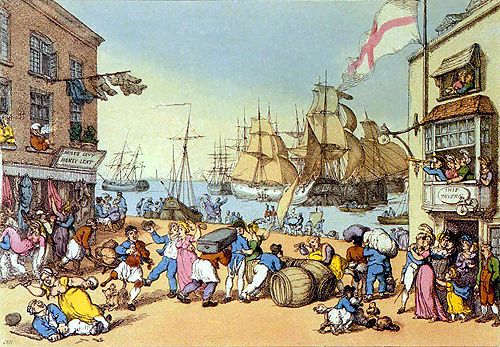
"Portsmouth Point" by Thomas Rowlandson.
Source: Lyrita Records CD (my rip!)
Formats: FLAC(RAR), ADD Stereo, mp3(320)
File Sizes: 370 MB / 171 MB (FLAC version incl. artwork & booklet)
The FLAC link has now expired. No more requests for this, please!
mp3 version – https://mega.co.nz/#!3JdUyDCJ!zjpRo8CCySDFnPyqllG_7vfLls3yXepdgcaY-HLq7yM
Enjoy! Don’t share! Buy the original! And please click on "Like" if you downloaded this album! 🙂
LP’s now (i own it since 1993 ;O) on one disc.
Alexandre Tansman’s final three symphonies all use the standard four-movement format with
Scherzo placed third. The Seventh (1944) is subtitled "Lyrique" and its outer movements, as well
as the Andante cantabile, illustrate why. But the bulk of the work is rhythmic and vigorous, not least
in the playful Scherzo. It is not hard to see why it made such an impression at its premiere in 1947.
The Eighth Symphony, however, the Eighth (1947-48) may even be the finer work, especially
in the final three movements (the Scherzo is a real gem), and possibly Tansman’s finest. Both
symphonies rely heavily on Stravinskian neoclassicism – particularly that of the Symphony in C –
but Tansman adapted this to create a naturally symphonic manner utterly alien to the Russian.
Tansman also had a flair for orchestration and a knack for soaring melodies not far removed from
Martinu’s symphonies. After their success, it may seem a surprise that Tansman’s Ninth and last was
never performed during the remaining 28 years of his life, a symphonic silence almost as long as that
of Sibelius. The answer may be a variant of “ninth symphony syndrome”; perhaps the composer
realised that the symphony did not recapture the ???lan of its predecessors, still less scale the heights
of Beethoven, Bruckner or Schubert.
Music Composed by Alexandre Tansman
Played by the Melbourne Symphony Orchestra
Conducted by Oleg Caetani
"The Seventh Symphony of 1944, as a matter of fact, is dedicated to Stravinsky, but that’s the
end of the connection. Although subtitled “Lyrique,” this is not its most salient aspect. As in
most of the Tansman symphonies, four movements lasting more or less 20 minutes is a sufficient
compass within which Tansman works his transformative wiles, opening (and sometimes closing)
with a minute or two of quiet pensiveness before plunging into his characteristically sleek and
motoric drive in which one can sometimes faintly discern echoes of Poulenc and Gershwin. Some
of the bustling themes make one think of An American in Paris , but instead this is “ A Pole in
Paris,” having the time of his life. After an Andante sostenuto slow movement and a Molto
vivo Scherzo (both of these also quite typical), the finale moves back and forth between a
mournfully reflective Adagio and an invigorating Allegro deciso before falling away into gradual
diminishment. (This is what we think the marking Perdendoso means.)
The 1948 Eighth Symphony (the only work here to have been briefly available in a rather dim
“live” Dutch performance conducted by Kubel???k) was originally titled Music for Orchestra , an
indication that during his final decades Tansman would be moving away from strict Classical
forms and would even be injecting more atonalish textures into some of his later works. This
22-minute, four-movement symphony is distinguished by a rather austere “El???gie” in memory
of the Belgian conductor Franz Andr??? and a Molto vivace Scherzo that is full of jazzy offbeats.
Tansman’s Ninth and final effort in the symphony form—though there was to be a piquant
Chamber Symphony for oboe, English horn, and chamber symphony during the 1960s—was
not commissioned, as were the others, and thus was never heard by the composer. But in this
magisterial work Tansman gives us the quintessential Tansman universe in which his trademark
industrial-strength ostinato rhythms and his vibrant sectional harmonic shifts and washes
of sound reach heights of excitement and ethereality that are alternatively terrifying and
exhilarating. The Grave slow movement is one of his most dignified and commemorative,
while the scherzo begins Molto vivace but gradually shifts gears into his typical fade-out
finish. Though the finale begins Lento, it is quickly overwhelmed by a threatening Allegro
con moto molto risoluto double fugue (one of his rare instances of fully developed
counterpoint), climaxing in a peroration of complex grandeur. This is Tansman operating
at the peak of his powers.
Oleg Caetani and his down-under musicians give this hair-raisingly impetuous but always
disciplined music the strongest possible advocacy, with Chandos’s Super Audio engineering
adding an ambience and finish of hyperreality. This CD is the best possible introduction
to a composer who deserves far wider exposure. The 2008 Want List begins to grow."
Fanfare
Source: Chandos Records CD (my rip!)
Formats: FLAC(RAR), ADD Stereo, mp3(320)
File Sizes: 225 MB / 148 MB (FLAC version incl. artwork & booklet)
The FLAC link has now expired. No more requests for this, please!
mp3 version – https://mega.co.nz/#!LIMTGKwC!-z4rtyZJffufFYKKeahLv_JR9dJ_BOnW6IZykZryR54
Enjoy! Don’t share! Buy the original! And please click on "Like" if you downloaded this album! 🙂
The story of my life. 😉
No.722
2013 celebrated the 100th anniversary of the birth of Jerome Moross, an American original.
Best known for his outstanding motion picture scores, he considered himself primarily a composer
of concert music and this recording, originally released by Koch, demonstrates his considerable
contribution to American music. Writing for the theatre remained Moross’ first love as a composer.
Frankie and Johnny, written in 1938, was one of a number of works he wrote for this medium.
The recording spans his compositional output from his earliest work, Biguine, written in 1934,
to his last completed work, the Concerto for Flute and String Orchestra, composed in 1978.
Music Composed by Jerome Moross
Played by the New Zealand Symphony Orchestra
With Alexa Still (flute)
Conducted by JoAnn Falletta
"Once again, producer Michael Fine has come up with a fascinating and rewarding program
off the well-worn path. The performances are good, better than merely professional, with
Alexa Still particularly adept at sweet singing when the composer calls for it. Most labels,
even when recording unfamiliar repertoire, tend to record the same unfamiliar repertoire,
on the likely grounds that it has some sort of track record. Fine mixes less-familiar with
largely unknown. In my opinion, his catalogue is one of the most enterprising and lively
in the business. And, yes, I bought this disc with my own money."
Classical Net
Source: Albany Records CD (Originally on Koch International) (my rip!)
Formats: FLAC(RAR), DDD Stereo, mp3(320)
File Sizes: 267 MB / 136 MB (FLAC version incl. cover & booklet)
The FLAC link has now expired. No more requests for this, please!
mp3 version – https://mega.co.nz/#!rJUzXAyR!V-Ej0WpIXD5EyZ3zdj10cqCs2Xbql58UFIelqVOrCaw
Enjoy! Don’t share! Buy the original! And please click on "Like" if you downloaded this album! 🙂
———- Post added at 05:41 PM ———- Previous post was at 05:36 PM ———-
The FLAC links for Nos. 691 to 700 have now expired. No more requests for these, please!
Kurt Weill’s Kleine Dreigroschenmusik (Little Three-Penny-Music) is one of the mainstays of the
repertoire for symphonic winds. It is in Weill’s characteristic mixture of classical, popular, and dance
music styles with an overlay of a rather seedy-sounding adaptation of European jazz styles.
It contains one of the best-known of all popular songs. Weill’s successes on the stage led Bertolt Brecht
to propose a full-length work to be adapted from Gay and Pepusch’s The Beggars’ Opera (1728).
That work had done what Weill and Brecht wanted to do: It had practically swept traditional opera off
the stage in London, substituting a new form that used popular ballads as its musical basis. Weill
wrote all new music, while Brecht adapted the tale of the life and loves of the villain Macheath to
a more contemporary setting, enabling him to attack the corruption and moral decay he attributed
to the democratic Weimar government. Die Dreigroschenoper (Three-Penny Opera) was a sensation
and played at least 10,000 performances in various productions in the 1920s. In 1929, Weill responded
to requests for an orchestral suite by adapting eight of its numbers into a suite.
Although widely known as a writer of bizarre, mysterious works such as the novel "The Sheltering
Sky" and the fabulous collection of short stories "The Delicate Prey and Other Stories", the ex-patriate
American Paul Bowles has also been a prolific composer of songs, operas and instrumental
pieces, who studied with Aaron Copland, Virgil Thompson and Nadia Boulanger. Originally written
for an Orson Welles production "Too Much Johnson", Music for a Farce for a small orchestra,
including a percussion section with unusual instruments like an electric doorbell and milk bottles,
was composed in 1938. It a hilarious set of 8 sections of "slap-stick"-like music with chase scenes,
prat-falls, and some really (and purposefully) corny sentimental music.
Edgar Var???se often insisted that music is both a science and an art. With his ingeniously
inventive orchestration in mind, through which he put many sounds into the world that had never
existed before, perhaps he should have summed it up as "alchemy"; he certainly did love the
symbolism of arcane religions. Octandre is a brilliant, purely technical study of the
inexplicable abracadabra of sound that Carlos Ch???vez rightly called gold. With this
accomplishment, Var???se moved significantly closer to his ideal of a purely material
music of "spatial projection."
Music by (see above) & Bohuslav Martinu
Played by the Chicago Pro Musica Chamber Players
"It takes a fairly exceptional account of the Kleine Dreigroschenmusik to hold a candle
to the London Sinfonietta on DG, but this one by the Chicago Pro Musica, whose players
are drawn from the Chicago Symphony Orchestra, certainly does; I would happily take
either recording from my shelves, confident of 20 minutes’ pleasurable listening.
Arguably there is more to Weill’s music than that, and there are quite a few details
where David Atherton persuades his players to add an ironic twist, which is not a
concern of the Chicagoans. And the generosity of vibrato in the latter ensemble’s
saxophones and trombone (rather George Chisholm-ish in the "Ballad of Mack the
Knife") is not a plus in my book. Still, for accomplishment, refinement, and clarity
of recorded balance, the performance remains a fine one.
If the players are, as it seems, unconducted, their Var???se Octandre is quite remarkably
polished, with every detail of the score meticulously observed and ensemble playing
razorsharp. Again, so far as characterization is concerned, there is an argument for
the grating of a slightly blunt razor in this music (the rasping trumpet gets it, the
rather polite horn misses it) in order for its violent energy to register fully; but the
sheer musicality of this reading gives it a validity all its own.
Paul Bowles’s Music for a Farce adds rather less to the sum total of human experience,
although its scoring resourcefully conceals the fact that only five players are involved
(which in turn reflects on the exceptional skill of the Chicago players in varying
perspectives and shading tone-colours). Dating from 1938, this suite of incidental
music hankers after a time when Satie’s Parade and Milhaud’s La creation du monde
were freshly minted.
After this, Martin???’s La revue de cuisine gives the disc a happy send-off, the more
so for the wit with which Easley Blackwood dispatches the vamp-till-everybody-else-
is-fed-up piano part and for the delicious rhythmic pointing of the proto Maxwell
Davies "Charleston"."
Gramophone
Source: Reference Recordings CD (my rip!)
Formats: FLAC(RAR), DDD Stereo, mp3(320)
File Sizes: 255 MB / 127 MB (FLAC version incl. cover & booklet)
The FLAC link has now expired. No more requests for this, please!
mp3 version – https://mega.co.nz/#!OIlRyJZT!o_w8pFcNCBD8QzYVCEFW6cYpkSWQcfhtbnUq4LE TM2c
Enjoy! Don’t share! Buy the original! And please click on "Like" if you downloaded this album! 🙂
One of the most significant threads in Gian Francesco Malipiero’s huge and many-sided output,
the symphonies strengthen his claim to be regarded as the most important and original Italian composer
of his generation. Sinfonia dello zodiaco vividly depicts the ever-changing moods of the four seasons
in twelve movements that are analogous to the signs of the zodiac. The work’s four component main
subdivisions (or partitas [‘partite’], as they are called in the score) are each further subdivided into three,
making no fewer than twelve movements altogether. These are designed to be played with somewhat
longer pauses between the partitas than between the individual movements within the partitas.
Moreover it is clear from the symphony’s subtitle (‘4 partite: dalla Primavera all’inverno’), as well as
from internal evidence, that the partitas correspond to the seasons of the year; while the component
movements are analogous, at least in number, to the twelve signs of the zodiac mentioned
in the main title. Malipiero was himself extremely evasive about the inspiration behind this work
(‘I can say nothing about this symphony—neither justify its form nor its title. I must keep the secret
of its origins’). Examination of the music, however, reveals no obviously recognizable attempt to
depict the zodiac signs themselves: the overtly descriptive elements seem to relate entirely to
the cycle of the seasons.
The perky capriciousness of his brief Symphony No.9 is interrupted by an unforgettable but enigmatic
outburst by trumpets and percussion marked ‘Ahim???’ (Alas!) in the score. Symphony No.10, his
musical tribute to an admired colleague, Hermann Scherchen, is named after the ancient Greek goddess
who cuts short the thread of life.
Music Composed by Gian Francesco Malipiero
Played by the Moscow Symphony Orchestra
Conducted by Antonio de Almeida
"The Moscow Symphony Orchestra in 1993 was basically a pick-up band, and not the world’s
greatest by a long shot, but these nevertheless are appealing performances of some very
strange music. The Sinfonia dello zodiaco covers a lot of territory: the 12 months of the year,
signs of the zodiac, divided into three “partitas”, each representing one of the seasons. It’s
colorful, curiously wistful music well worth getting to know. The two symphonies are later
works, written in an acerbic chromatic idiom. No. 9, “dell’ahim???”, features a violent scream
at the beginning of its finale, hence the title. No. 10, “Atropo”, is a very brief piece in four
pithy movements, dedicated to Hermann Scherchen, who championed so much modern
music. It’s possible to imagine more unanimity from the strings, or some sweeter-toned
reeds, but it probably will be a long time before something better comes along. Until
then, this series is more than respectable."
Classics Today
Source: Marco Polo CD (my rip!)
Formats: FLAC(RAR), DDD Stereo, mp3(320)
File Sizes: 292 MB / 165 MB (FLAC version incl. cover & booklet)
The FLAC link has now expired. No more requests for this, please!
mp3 version – https://mega.co.nz/#!TUV3gRhK!bhzK2sPa8qfLHMG5z2Up1Gh8t-jqZwzGhwZVR-YNP2o
Enjoy! Don’t share! Buy the original! And please click on "Like" if you downloaded this album! 🙂
This album, with four world premiere releases, offers a representative
slice of 20th-century Swiss music, ranging from Othmar Schoeck’s late-
Romanticism via the neoclassicism of Adolf Brunner to the Modernism
of Ernst Widmer. Nearly fifty years separate Schoeck’s first and
last major orchestral works, recorded here – but his commitment to the
German Romantic tradition remains undimmed. Brunner’s neoclassical
Partita betrays the influence of Hindemith, but has a Brahmsian
meatiness to its piano part, while Widmer’s influences in his exuberant
concerto range from Bart???k to Brazilian street music.
Music by Othmar Schoeck, Adolf Brunner & Ernst Widmer
Played by the Royal Scottish National Orchestra
With Fali Pavri (piano) & Martin Gibson (timpani)
Conducted by Rainer Held
"Othmar Schoeck was an important Swiss composer during the first half of the
twentieth century. In contrast to the more dissonant style pursued by contemporaries,
Schoeck is known for his essentially tonal music and his attention to melodic values,
rather than dissonant effects. As to his many works, Schoeck made major
contributions to lieder with his numerous settings of song texts.
Schoeck studied formally at the Zurich Conservatory and during the period 1907-
08 worked privately with Max Reger in Leipzig. When he returned to Zurich in
1908, he established a career that involved composition and conducting. Among
his earliest works is a Serenade for Orchestra (1908) which was part of a composition
festival in Baden. He quickly became recognized as a composer for orchestra and
song; he held various teaching positions and performed on piano to accompany his
wife, and several other singers. Schoeck remained in Switzerland throughout his
career, where he was regarded as the country’s foremost musician. In addition to
lieder and orchestral works, Schoeck composed several operas, the most important
of which is Penthesilea (1927), an impressive setting of Kleist’s drama. Of his other
works, it is notable that he composed various settings for male chorus, a medium
associated with song of the choral societies of the nineteenth century.
Stylistically Schoeck’s clearly tonal works involve some careful and effective use
of dissonance. His music is reminiscent of Hindemith from the 1930s and 1940s.
As with Hindemith, Schoeck’s strong anchoring in traditional harmony and
conventional forms made his music more accessible to the general public."
All Music

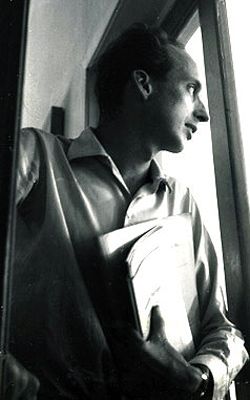
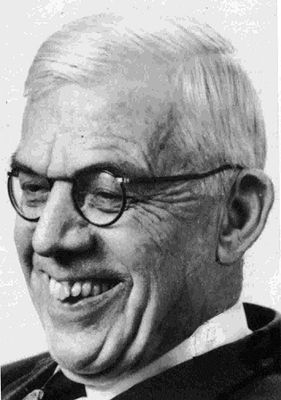
Othmar Schoeck, Ernst Widmer, Adolf Brunner.
Source: Guild CD (my rip!)
Formats: FLAC(RAR), DDD Stereo, mp3(320)
File Sizes: 376 MB / 186 MB (FLAC version incl. artwork & booklet)
The FLAC link has now expired. No more requests for this, please!
mp3 version – https://mega.co.nz/#!6VMU1LCa!7WjYkbcuOLNAuUrTZnQRbaleZ4VHItULIIdvGl5 uHMk
Enjoy! Don’t share! Buy the original! And please click on "Like" if you downloaded this album! 🙂
striking piece on that abum. Full of memorable incident. 🙂
No.726
Under the direction of Professor Russel Mikkelson, The Ohio State University Wind
Symphony is a nationally recognized ensemble devoted to the preparation and performance
of the finest traditional and contemporary music for band. On this disc from Naxos’s popular
Wind Band Classics series, they present a wide-ranging program with global connections, from
the overture to Russian composer Dmitry Kabalevsky’s opera about a Breton master carpenter,
Colas Breugnon, to Aaron Copland’s El sal???n M???xico which takes us ‘south of the border’.
Contemporary American composers are represented by Donald Grantham, whose Southern
Harmony draws on an 1835 collection of American songs, Morten Lauridsen’s sublimely
still O Magnum Mysterium, and John Stevens’s colorfully-scored Symphony in Three
Movements.
Music by (see above)
Played by the Ohio State University Wind Symphony
Conducted by Russel Mikkelson
"It’s telling that the disc gets its title from the Grantham—it’s a superior piece to the much longer
Stevens, which is unfortunate. The wind band world could use more “substantial”—longer, more
“symphonic” in conception—works like this Symphony. However the musical content here simply
can’t sustain interest over this long a duration. Stevens is an interesting composer and has written
some very appealing pieces for brass instruments; one hopes a full band work of comparable
quality is forthcoming. By comparison, the Grantham is one of the finest original works for winds
of the last twenty years. While exploring and developing folk materials is hardly new territory
for band works, the composer manages to do so in a fresh and interesting way. The antiphonal
clapping in the brief third movement is tremendously exciting, and the harmonic language is
original and ingratiating, especially in the second and fourth movements.
All the transcriptions are excellent. The Copland is not only very idiomatic—the original has
plenty of wind and percussion emphasis already—but receives what is probably the best
performance on the disc. The Lauridsen has become extremely popular both in its original
choral version, and in this great version for winds. While I wouldn’t say this version is superior
to the original, the drama of the piece is made more explicit by the wider dynamic range and
tone colors, both expertly handled by Reynolds. The Kabalevsky is not quite as convincing as
the other two, but is effective enough as a flashy opener."
Musicweb
Source: Naxos CD (my rip!)
Formats: FLAC(RAR), DDD Stereo, mp3(320)
File Sizes: 239 MB / 138 MB (FLAC version incl. cover & booklet)
The FLAC link has now expired. No more requests for this, please!
mp3 version – https://mega.co.nz/#!rJ81QKDI!dxpJckLA8MNEpwRdXKDJm72Q7V0PtnegszxmX2k eGeQ
Enjoy! Don’t share! Buy the original! And please click on "Like" if you downloaded this album! 🙂
The CD’s title "Visions of the East" alludes to the overtly Japanese and Indian idioms that generate these works,
and which were Alan Hovhaness’s stylistic modus operandi of the early-to-mid 1960s. This disc certainly lays
to rest the myth sometimes propagated that Hovhaness’ music was all hued by Armenian liturgical or folk influences;
in fact, he had already moved on by the mid-1950s. These recorded works are responses to the composer’s
extended trips to locations such as Bombay, Madras, Tokyo, Seoul and Hawaii, and show his orchestral writing at
its most radically non-Western. The classical Indian currents that pervade the Vahaken Symphony (misleadingly
catalogued as No.10) show a composer at ease with just melody – and a little rhythm – to generate an entire
extended work, whilst the clear musical template for works such as Floating World and Zeami is the
Gagaku court music of ancient Japan. It was perhaps inevitable that as Hovhaness learned Gagaku instruments
when in Tokyo, he would incorporate their idioms into his works.
Whilst these evocative works are anything but rehashes of his celebrated Mysterious Mountain, there will
hardly be disappointment for lovers of that work – as ever, the composer retains his transparent, shimmering
textures and graceful melodic lines, albeit with much bolder exotic strokes and little-to-no Western rhetoric.
In the sonoristic tone poems Ode, Floating World and Zeami Hovhaness employs, to great
effect, his apocalyptic orchestral whirlwinds of "controlled chaos" – a nice musical analogy to his Japanese
subject matter. Listeners may momentarily be reminded of Messiaen in pentatonic mode (think Turangalila
Symphony), but this is very much Hovhaness’ personal response to Eastern music, something which
he investigated with a sense of wonder and humility a long time before serious composers were
‘sanctioned’ to do so by the university World Music curriculum.
Music Composed by Alan Hovhaness
Played by the Frost Symphony Orchestra of Miami University
Conducted by Chung Park
"This is one of the best Hovhaness recordings to come along in quite a while. Yes, much
of his music has a familiar, repetitive quality: bells and gongs, rippling harps, sinuous Eastern
melodies, the occasional fugue (especially in the symphonies), the use of glissandos, soft
chord clusters, and rhythmically free episodes inspired by his study of Korean and Japanese
traditional music, and a love of simple prettiness connects all of these pieces. But this
doesn’t mean that they are identical.
For example, Floating World is a symphonic poem that includes a clear march episode
(unusual in Hovhaness) and a more pungent harmonic language than we usually find.
The symphony, in three movements of modest length, has a directness and concision
that really is “symphonic”, comparatively. Both Ode to the Temple of Sound and
Meditation on Zeami are just plain gorgeous, in the vein of Mysterious Mountain or
Fra Angelico. All are CD premieres, and all are splendidly played and recorded by
the orchestra of the University of Miami. Fans of the composer, and you know who
you are, will definitely want this."
Classics Today http://i1164.photobucket.com/albums/q574/taliskerstorm/p10s10_zps5b3sk0gq.gif
Source: Centaur Records CD (my rip!)
Formats: FLAC(RAR), DDD Stereo, mp3(320)
File Sizes: 207 MB / 133 MB (FLAC version incl. covers & booklet)
The FLAC link has now expired. No more requests for this, please!
mp3 version – https://mega.co.nz/#!6BFxET5I!ZjGbtgwqp5KeBFpnDlVGjZleWS_RsbWMp_zs9iR FYbY
Enjoy! Don’t share! Buy the original! And please click on "Like" if you downloaded this album! 🙂
The English pianist, organist, celesta-player and composer, Roderick James Charles Elms (*1951),
studied at the Guildhall School of Music (graduating in 1965), and at the Royal Academy of Music
(graduating in 1970), which has awarded him the honorary distinction of Associateship in recognition
of his contribution to the music profession. In 1974 he became Fellow of the Royal College of Organists.
Roderick Elms appears in concerts, recordings and broadcasts (Radio and Television) with most of
Britain’s major orchestras, both as a principal keyboard player and soloist.
Elms has had a lifelong passion for writing and his compositions feature regularly in concerts,
church services and broadcasts. He is Composer in Association to the Elgar Chamber Orchestra
and his compositions, which range in diversity from solo instrumental music to symphonic
compositions, are now heard across the UK, the USA and Canada. Much of his instrumental music
has been recorded by the RPO for the Dutton label under the title "A Little Fall-ish!"
This CD includes his popular Concertino for Celeste, Four Seasonal Nocturnes for horn,
Cygncopations for cor anglais and the P???an for organ and strings. This is essentially
British "light music" meant to amuse and entertain.
Music Composed by Roderick Elms
Played by the Royal Philharmonic Orchestra
With Roderick Elms (celesta) & Victoria Walpole (cor anglais)
And Janice Graham (violin) & Stuart Nicholson (organ)
Conducted by Stephen Bell
"This CD was issued in 2006 but seems not to have been reviewed here previously.
More’s the pity, because it’s one of the most enjoyable British light music CDs to come
my way in recent years. Roderick Elms’s name will already be well enough known for
his appearances on CD as solo pianist in music by Richard Addinsell, Hubert Bath and
others. The music here, though, is by no means written just as a vehicle for his own
performing talents. Indeed Elms appears only as soloist in the opening Concertino
for Celeste and as pianist in a few other pieces.
Don’t let the CD’s somewhat gimmicky title, ‘A Little Fall-ish!’, put you off. The music
belongs irrefutably to the British light music tradition. The CD title comes from the
first movement of the delightful Four Seasonal Nocturnes for solo horn and orchestra,
which capture aspects of the changing seasons in various countries. A breath of
fresh air is above all what the CD conveys, with suggestions of Delius and Vaughan
Williams in the restrained and delicate orchestration. That Elms has a fine ear for
instrumental textures and colours is further demonstrated by the ‘Fandango
Fantastico’ for organ and guitar, and not least by the final three-movement suite
of arrangements of Bach for piano and orchestra. Altogether this is a CD of
atmospheric and approachable music of real charm. Elms is very decidedly a
composer worth getting to know."
Masterkeyboards
Source: Dutton Epoch CD (my rip!)
Formats: FLAC(RAR), DDD Stereo, mp3(320)
File Sizes: 308 MB / 152 MB (FLAC version incl. covers & booklet)
The FLAC link has now expired. No more requests for this, please!
mp3 version – https://mega.co.nz/#!OJdUVAbS!I0U6Le5K1AlgQSMh3Qx9zTSBubY-fYasOSNkMux2t3k
Enjoy! Don’t share! Buy the original! And please click on "Like" if you downloaded this album! 🙂
———- Post added at 06:54 PM ———- Previous post was at 06:21 PM ———-
The FLAC links for posts Nos. 701-710 have now expired. No more requests for these, please!
Just finished listening to it. Beautiful music.
booster-t is quite right, ‘a wonderful little piece.’
I also chuckle at the rest with the subtle humour in such titles as ‘the horn in winter and the horn in the sun etc.’ (well that’s the way I look at it, anyway).
Overall a really pleasant, relaxing and understated cd, but (probably because of this) a memorable and totally enjoyable one.
Many thanks wimpel69.
Danish composer Peder Gram (1881-1956) enjoyed a prominent position in his time,
not only because of the fine craftsmanship and artistic standard of his musical works, but also
because of the many organizational duties in the musical world that made him one of his
generation’s most influential Danish musical personalities. This release features some of Peder
Gram’s most exciting orchestral works, covering the full spectrum of large-scale expression;
from the sparkling and effectful to the highly dramatic and illustrative, festive and powerful.
Music Composed by Peder Gram
Played by the South Jutland Symphony Orchestra
Conducted by Matthias Aeschbacher
"Peder Gram is a composer well worth getting to know. His administrative duties as the
guiding spirit behind the establishing of Danish Radio in the first half of the 1900s
prevented him from composing a large body of music, but what he did write is clearly
of high quality. A contemporary of Nielsen, he shares some of his more famous colleague’s
neo-classical leanings: the driving rhythms and effective use of woodwind sonority are
both in evidence, and the two composers share some harmonic quirks that mark their
music as distinctively Danish. Otherwise, Gram goes his own way, both in his love of
instrumental color (he has a particular fondness for the celesta) and in his occasional
recourse, in Po???me Lyrique and the Prologue to a Drama by Shakespeare, to a richer,
more fin-de-si???cle sort of Romantic lushness of texture.
The outstanding item on this disc is the First Symphony, a three-movement piece that’s
melodically very attractive, convincingly structured, and beautifully scored (consider
the effective contributions of the harp, an instrument that Nielsen likened to finding
“a hair in the soup”). The performances are vital and committed, doing the music full
justice, but it’s also true that the strings of the South Jutland Symphony Orchestra sound
thin at times, and the acoustics of the recording venue, a bit dry (if clear), don’t flatter
them. Still, for the sheer quality of the pieces themselves, and for the usefulness of this
disc in rounding out the picture of Danish music in the first decades of the last century,
I have no problem in suggesting that you give Gram a listen."
Classics Today
Source: Dacapo CD (my rip!)
Formats: FLAC(RAR), DDD Stereo, mp3(320)
File Sizes: 327 MB / 146 MB (FLAC version incl. covers & booklet)
The FLAC link has now expired. No more requests for this, please!
mp3 version – https://mega.co.nz/#!SUszDA6S!oijNBew5FVkcRPP5Uo7Icb0JmYo3LyXALgHivqo vLtw
Enjoy! Don’t share! Buy the original! And please click on "Like" if you downloaded this album! 🙂
which was – ironically – the very last depositfiles upload that was deleted.
The gentle urbane art of Jean Francaix, at once freshly engaging and invariably distinguished
by an unerring sense of style, has endeared itself to successive generations of musicians and music-
lovers. His death in 1997 at the age of 85 removed from contemporary music one of its most
immediately appealing and distinctly Gallic masters. This alluring orchestral music undulates between
the dreamy and the dramatic, exemplifying Francaix’s attractive use of sound colour and harmonies.
The Scuola di Ballo, a ballet in one act, is based on music by Boccherini, largely from his quintets.
The Pavane pour un G???nie vivant was written to mark the fiftieth anniversary of Ravel’s death, and
the Symphonie was written in Haydn’s memory. The S???r???nade has neoclassical overtones,
and the Ouverture anacr???ontique attempts to portray an imaginary world, without wars, in which
all is well. The content therefore is largely retrospective, but remains charismatically original throughout.
Music Composed by Jean Francaix
Played by the Ulster Orchestra
Conducted by Thierry Fischer
"For addicts of Jean Fran???aix’s droll, deadpan and meltingly lyrical work, Hyperion has
delivered again. This round-up covers 50 years of his creative life, starting from the Serenade
which helped get his name around in his precocious early twenties: fully formed Fran???aix
in miniature, with Jacques Ibert the only hint of a precedent for its audacious blend of
refinement and good humour, spiked with character episodes for solo trombone or
folksy violin or reflective bassoon."
BBC Music Magazine
Source: Hyperion Records CD (my rip!)
Formats: FLAC(RAR), DDD Stereo, mp3(320)
File Sizes: 259 MB / 165 MB (FLAC version incl. cover & booklet)
The FLAC link has now expired. No more requests for this, please!
mp3 version – https://mega.co.nz/#!2N91QKKQ!RyQvChCK6EmYFGQ3M6ozLl_pa3_C8F7tRjnjc0y IFpE
Enjoy! Don’t share! Buy the original! And please click on "Like" if you downloaded this album! 🙂
Dutch composer Johannes Verhulst (1816-1891) was a prot???g???e of Mendelssohn’s and became
musical director of Leipzig’s popular Euterpe concerts. The success of his compositions led to a
knighthood from King Willem II and the position of Director of the Royal Music. Other prestigious
directorships followed. His influence was tremendous: he familiarised Dutch audiences with the
works of Schumann, Gade and Brahms; he had a great affinity for the music of Beethoven, setting
a new standard for its performance; his international reputation was confirmed with an honorary
membership, together with Liszt, Berlioz and Gade, awarded by London’s Royal Philharmonic Society.
Verhulst’s Symphony in E minor was written in Leipzig in 1841 and achieved lasting popularity
for its warm, colourful orchestration and youthful freshness. The gifts of the young Verhulst emerge
in all three of his concert overtures, which were composed between 1835 and 1839, the years
of his apprenticeship. Verhulst’s music is characteristic of its time and reminiscent of that of
Schumann and Mendelssohn, with whom he was well acquainted.
Music Composed by Johannes Verhulst
Played by the Residentie Orchestra The Hague
Conducted by Matthias Bamert
"This is enjoyable and cultivated music and is persuasively performed here, the Residentie
Orchestra responding eagerly to Matthias Bamerts clear-sighted direction and ear for detail.
The recording is excellent, as is Leo Samamas extensive booklet note. One wants now to
explore Chandos previous issue of Verhulst, his Mass setting, Op. 20."
Gramophone
Source: Chandos Records CD (my rip!)
Formats: FLAC(RAR), DDD Stereo, mp3(320)
File Sizes: 263 MB / 135 MB (FLAC version incl. cover & booklet)
The FLAC link has now expired. No more requests for this, please!
mp3 version – https://mega.co.nz/#!2EkwlI7S!GYu6tR4vKVeatAwZYt6KKLAd4Q59Ui9ijOEraU7 NlLU
Enjoy! Don’t share! Buy the original! And please click on "Like" if you downloaded this album! 🙂
Bernard Rands (born 2 March 1934) is a British-American composer of contemporary classical music.
Rands was born in Sheffield, England. He studied music and English literature at the University of Wales,
Bangor, and composition with Pierre Boulez and Bruno Maderna in Darmstadt, Germany, and with Luigi
Dallapiccola and Luciano Berio in Milan, Italy. He held residencies at Princeton University, the University
of Illinois, and the University of York before emigrating to the United States in 1975; he became a U.S.
citizen in 1983. In 1984, Rands’s Canti del Sole, premiered by Paul Sperry, Zubin Mehta, and the
New York Philharmonic, won the Pulitzer Prize for Music.
Commissioned by Meet the Composer and The Philadelphia Orchestra as part of the former organization’s
Orchestra Residencies Program, Canti dell’Eclisse (Songs of the Eclipse) was given its premiere by
the Orchestra with bass soloist Thomas Paul and Conductor Gerard Schwarz on January 28, 1993, at the
Academy of Music in Philadelphia.
The first work Rands wrote expressly for The Philadelphia Orchestra in his capacity as its composer-in-
residence was Ceremonial 3, commissioned by Carnegie Hall in honor of its centennial, and given
its premiere there under Riccardo Muti’s baton on March 18, 1991.
Completed in October 1984, each of the two suites of Le Tambourin, which may be performed separately,
consists of three short movements, scored for large orchestra. The musical character of each of the individual
movements was prompted by specific visual characteristics found in certain paintings and drawings by Van Gogh.
Music Composed by Bernard Rands
Played by The Philadelphia Orchestra
With Thomas Paul (bass )
Conducted by Riccardo Muti & Gerard Schwarz
Source: New World Records CD (my rip!)
Formats: FLAC(RAR), DDD Stereo, mp3(320)
File Sizes: 301 MB / 199 MB (FLAC version incl. cover & liner notes)
The FLAC link has now expired. No more requests for this, please!
mp3 version – https://mega.co.nz/#!6JVmwIDb!Vr7Aq-JRYjJYrKE3mpKMDuJcYYrDPvxTOwDeiw2s-7k
Enjoy! Don’t share! Buy the original! And please click on "Like" if you downloaded this album! 🙂
American composer James Yannatos (1929-2011) comments on the works on this album:
"I was transfixed by events in Tiananmen Square – excited by the students’ quest for (greater) freedom
and appalled by the brutal response by the government. As a musician I felt impelled to speak out in the
only way I could. I spent the summer of 1989 immersed in the rhythms and cadences of Chinese folk tunes from a
collection by Yuen Ren Chao given to me by his daughter, Rulan Chao Pian, my colleague in the music
department. Elements of these tunes were chosen to serve as my musical materials for the six movement
symphony I planned to write. Sketches were made that summer and the work was completed
and orchestrated by January of 1990. The emotions I originally felt – anger, frustration, helplessness,
sadness were transformed during the composition of the piece into a more positive, hopeful, even
joyous vision of what could be – what will be. The tragic elements became a subplot in the drama;
the energy, hope, and vision of the students became the central image. Each movement is a tableau,
self-contained but referential, thematically and emotionally, to the whole.
William Doppmann, who performed the Barber Piano Concerto with the Harvard-
Radcliffe Orchestra in 1988, asked me to write him a Piano Concerto. The only guidelines given were
that it be a substantial piece which would show off the piano in various ways. I started to think
of ways to approach this formidable task in the summer of 1992, started to compose the work in
the fall of 1992, and finished it in the spring of 1993, completing the orchestration that summer.
From the past, the four-movement concerto grosso in which the soloist was also an integral part of the
ensemble served as a loose model. Motivic and thematic elements from a variety of past sources
(Vivaldi, Albinoni, doxology, Mozart) as well as from my own work served as musical material to be
integrated into an expressive and richly associative narrative work."
This is my second Yannatos upload on ffshrine. The first you can find >here< (http://forums.ffshrine.org/f92/wimpel69-concerto-collection-flac-work-progress-130729/17.html#post2791222).
Music Composed and Conducted by James Yannatos
Played by the Harvard-Radcliffe Orchestra
With William Doppmann (piano)
"Albany quickly follows up its well-received CD of James Yannatos’s Trinity Mass with
another disc of the composer’s music. Yet, while there are many impressive passages in
these two works – especially the symphony – I cannot say that I wholeheartedly urge you
to seek out this CD. The Piano Concerto of 1992-93 is genial, eclectic music that on first
hearing sounded winning and inviting….The Fourth Symphony (1989-90), subtitled
"Tiananmen Square," is another long work but one that I feel is slightly more successful….
For live recordings, the sound is excellent; the audience is dead silent, and the sound is
close and full."
Fanfare
Source: Albany Records CD (my rip!)
Formats: FLAC(RAR), DDD Stereo, mp3(320)
File Sizes: 230 MB / 142 MB (FLAC version incl. cover & liner notes)
The FLAC link has now expired. No more requests for this, please!
mp3 version – https://mega.co.nz/#!2UVQRYLA!_kmLiRUPRKgn_2YJlBf5jJ7E5WvEA7hmMYDZhso Da3o
Enjoy! Don’t share! Buy the original! And please click on "Like" if you downloaded this album! 🙂
The CD includes premiere recordings of works by Khachaturian, Gli???re, Prokofiev and Shostakovich.
It also features Rimsky-Korsakov’s popular Trombone Concerto, with the internationally acclaimed
French trombonist Jacques Mauger as soloist. The Royal Northern College of Music Wind Orchestra
performs internationally and is recognised as one of the leading conservatory ensembles in the world. It has
already released several highly enjoyable discs on Chandos, all notable for their energy and brilliance.
The Manchester Prokofiev Symposium of February 2003 included the world premiere performances of several
newly discovered or newly available works by Prokofiev. For example, until very recently, only the first two
marches of Marches for Military Band were available for performance. Prokofiev composed the third
march for a competition but never orchestrated it, which might explain the absence of a title. On the manuscrip
t of the piano score he wrote: ‘If the March is too long or the second trio too difficult, cut the trio out.’ The trio
was only reinstated in this arrangement by Samuel Becker, which also includes the omitted fourth march,
the Cavalry March, making this the first ever recording of the work as conceived by Prokofiev in 1937.
Khachaturian’s The Battle of Stalingrad is another premiere. In the mid-1970s the former music
director of Marlborough College asked Boosey and Hawkes for permission to arrange Khachaturian’s
ballet Gayane. The request eventually made it to Khachaturian himself, who not only granted
permission but sent an autographed score of the wind orchestra setting of the suite from his score
to the film The Battle of Stalingrad.
Works included:
Reinhold Gli???re: Solemn Overture for the 20th Anniversary of the October Revolution
Igor Stravinsky: Circus Polka
Sergei Prokofiev: Four Marches for Military Band, op.59
Nikolai Rimsky-Korsakov: Concerto for Trombone and Wind Band
Dmitri Shostakovich: March of the Soviet Militia, op.139
Sergei Prokofiev: Anthem for Military Band, op.98
Aram Khachaturian: The Battle of Stalingrad Suite, op.74a (Arr. Peel)
Music by (see above)
Played by the Royal Northern College of Music Wind Orchestra
With Jacques Mauger (trombone)
Conducted by Clark Rundell
"The band sound truly stunning in the best moments of the score, even through the more
hard-driven sections, and on the whole the performances on this disc are highly recommendable.
They possess a more transparent and flexible sound than the Stockholm band under Rozhdestvensky,
and their trademark lightness (especially noteworthy in the percussion) and crisp articulation
give this programme a wonderful shine. If your tolerance for marches and Socialist Realist
music is high enough, this could be an enjoyable excursion after all."
DSCH Journal
Source: Chandos Records CD (my rip!)
Formats: FLAC(RAR), DDD Stereo, mp3(320)
File Sizes: 281 MB / 159 MB (FLAC version incl. covers & booklet)
The FLAC link has now expired. No more requests for this, please!
mp3 version – https://mega.co.nz/#!LF011QDY!zV5F7eoMHsR7rF6JqZFG_gJrM29VAauXYWCAk7H OKqI
Enjoy! Don’t share! Buy the original! And please click on "Like" if you downloaded this album! 🙂
I hadn’t really listened to classical music outside of some of the classics (such as Beethoven, Mozart, Stravinsky and some others), and your postings have made me appreciate much more of this world.
———- Post added at 09:20 PM ———- Previous post was at 08:59 PM ———-
thank you
Born in Shanghai, now resident in Greater New York, Ge Gan-Ru is one of
China’s foremost composers. Very different from his previous exploration of the
Western avant-garde, Shanghai Reminiscences is a warm and affecting evocation
of “the street scenes and sounds” of Gan-ru’s childhood in pre-Cultural Revolution
Shanghai, viewed through the lens of his adopted American traditions. Butterfly
Overture is the composer’s symphonic tribute to a beloved teacher from his
Shanghai Conservatory days. International Record Review described Ge Gan-ru’s
string quartets (8.570603) as “Nothing short of contemporary masterpieces”.
Music Composed by Ge Gan-Ru
Played by the Royal Scottish National Orchestra
Conducted by Tsung Yeh
"Shanghai Reminiscences” shows the major instrumental effort straining to reproduce
a sort of imaginative autobiography in music of Ge Gan-Ru: we listen to the sound
of the first lessons on the violin, the sound of bell bike and the rhythm of pedaling
through to the sounds of the local markets and then the evocation of the Buddhist
temples and proto-military marches. We are in territories far from the frescoes of
Yi Feng, Fu or Fall of Baghdad, but this time the prevalence of western elements
is indispensable to cause the strong state empathy for urban sounds and sounds in
the past of the composer: Ge Gan-Ru has created a kind of “concrete” dialogue
among the instruments, with a powerful glue set towards a revival of classical
and romantic genre (which eventually becomes exotic)."
Percorsi Musicali
Source: Naxos CD (my rip!)
Formats: FLAC(RAR), DDD Stereo, mp3(320)
File Sizes: 353 MB / 170 MB (FLAC version incl. covers & booklet)
The FLAC link has now expired. No more requests for this, please!
mp3 version – https://mega.co.nz/#!CMklBZSB!_MsigMVStS4Nb9_bpS84hjUyts0g57MDriqNgWp zqFg
Enjoy! Don’t share! Buy the original! And please click on "Like" if you downloaded this album! 🙂
During the 1940s, American composer Hubert Klyne Headley (1906-1995) became internationally known
as a composer, concert pianist, and conductor. Given the former popularity of Headley’s music – Howard Hanson
described the California Suite as a “brilliant score” – and its immediate emotional accessibility, its
disappearance from the concert hall is to be greatly regretted. Throughout all of Headley’s compositions one
can sense beneath the veneer of romantic impressionism an undercurrent of greater depths that leads the
listener to, as Headley himself put it, “The way I have always felt inside.” A fitting tribute to a uniquely
talented American composer, this recording of four major works brings Headley’s music back from
undeserved obscurity.
Headley’s d???but composition for the American concert repertoire was his California Suite, commissioned
by the Standard Oil Company for the 1939 opening of the Golden Gate Exposition in San Francisco. There
were many performances over the next decade. Pierre Monteux referred to Headley as "one of our best
California composers". Headley’s music in general moves through smoothly linked series of emotionally
charged episodes rather than traditional movements. Especially notable is his dynamic use of the brass
choir, emerging already in "Golden Gate" from the California Suite, and reaching a high point in
the Symphony No.1 for Radio (1946). "Golden Gate" yields an impressionistic depiction of the
sights and sounds of San Francisco : the haunting calls of foghorns in the Bay, the ships, the celebrations
and the martial history. In Yosemite Headley invokes the peace and grandeur of California’s famed
"Yosemite Valley," punctuated by a magnificent extended fanfare suggesting the emotional impact of
the great granite cliffs and domes. The final movement, "Fiesta," celebrates the festive life of the
State’s varied cultural heritage.
The Piano Concerto No.1, subtitled "Argentango," was written under a grant from
Mrs Edward MacDowell and had its premi???re in 1941 on The Standard Hour with Henry Svederovsky
conducting. In 1942 Jos??? Iturbi performed and conducted the work with the Rochester Philharmonic
in New York. Iturbi wrote "I can only express a very high opinion of the composer". After the fierce
rhythmic drive of "Argentango," the Second Piano Concerto marks a distinct change. By 1945
Headley was moving into an intensely personal style. According to Headley’s wife Constance, the
composer dedicated the second concerto to the suffering and triumphs of oppressed peoples.
Here we now find deep spirituality, interrupted but not overcome by passages of severe conflict.
At one stunning moment the piano seems to battle with the brass section, bringing the music
to a momentary halt. The concerto ends with a triumphant affirmation of the
opening "spiritual" theme.
With the Symphony No.1 for Radio (1946) Headley reached a point of creative expression
truly symphonic in its intimations of pathos, tenderness, and grandeur. It is a remarkable score,
featuring solo instruments at times, and using the piano as a member of the orchestra alternately
with the harp. Comparisons are perhaps inappropriate for such an individualistic work, yet one
tends to hear the influence of the lean, wiry, economical orchestration of Sibelius combined
with the expansiveness of a Carl Nielsen.
Music Composed by Hubert Klyne Headley
Played by the Russian Philharmonic Orchestra
With Anna Bogolyubova (piano)
Conducted by Dmitry Yablonsky
"This is really fun. Hubert Headley (1906–95) is a composer in the tradition of Gershwin,
Still, Gillis, and Moross—that is, stylish, pop-influenced (’30s and ’40s), and well-crafted.
Howard Hanson and Pierre Monteux had nice things to say about the colorful and extremely
enjoyable California Suite, and during the 1940s it enjoyed a measure of popularity. Similarly,
the concertos are brilliantly scored and full of good ideas. Both are single-movement works
lasting a mere 11 and 15 minutes, respectively. The First Symphony (1946) requires just
13 minutes, and it’s likewise colorful and cogent. Certainly there is no reason why this
music should not become popular again; likely it faded from view because Headley
essentially gave up symphonic composition after the 1940s in favor of large-scale choral
music, but then so much good tonal music vanished after the "serial interruption" that
began in the 1950s. The performances here are consistently exciting, with Anna
Bogolyubova a confident soloist in the two concertos, and Dmitry Yablonsky leading
an orchestra that sounds like it’s having a remarkably good time. You will too."
Classics Today
Source: Naxos CD (my rip!)
Formats: FLAC(RAR), DDD Stereo, mp3(320)
File Sizes: 272 MB / 145 MB (FLAC version incl. covers & booklet)
The FLAC link has now expired. No more requests for this, please!
mp3 version – https://mega.co.nz/#!bRsATTYR!lIEHI8FErj5YrMkPC7NGv-OrnixHyjJQltucTQYWjOg
Enjoy! Don’t share! Buy the original! And please click on "Like" if you downloaded this album! 🙂
Edward MacDowell’s orchestral music has been shamefully neglected by record companies, so it’s
exciting that, as part of an ongoing relationship with the Library of Congress, Bridge Records has
gained access to the famous "Society for the Preservation of the American Musical Heritage" series of
recordings of these and other little-known pieces by American composers. There’s nothing especially
"American" about MacDowell’s music (except perhaps some of the tunes in his "Indian" Suite, not included
here). Rather, the influence is Liszt, especially in the tone poems. Actually, compared to his model,
MacDowell’s orchestration is superior, as is much of his melodic invention. These performances date back
to 1966, and have been very well remastered for this release.
Music Composed by Edward MacDowell
Played by the Royal Philharmonic Orchestra
Conducted by Karl Krueger
"These are not brand new recordings. It’s okay, because you can’t tell it. Karl Kreuger leads
spirited and atmospheric performances. MacDowell can come across turgid at times, but these
performances don’t. The pieces are well played and capture the varied moods involved. The
"two fragments from Song of Roland" – Saracens and Lovely Alda – are short and easy
listening, a little bigger than the miniatures MacDowell does so well, but still impressive.
Hamlet/Ophelia (opus 22, is a great pairing. The pieces don’t represent specific scenes
from Shakespeare, but more aspects of the characters involved. "Lancelot and Elaine"
(based on Mallory, of course), and Lamia are of greater consequence. They are wonderfully
evocative pieces. For style, think something between Liszt and Tchaikovsky, with a little
Sibelius thrown in. The repertoire may not be well known, but here it sounds like major music."
Amazon Reviewer
Source: Guild Records CD (my rip!)
Formats: FLAC(RAR), ADD Stereo, mp3(320)
File Sizes: 330 MB / 146 MB (FLAC version incl. covers & booklet)
The FLAC link has now expired. No more requests for this, please!
mp3 version – https://mega.co.nz/#!fF1lVCCb!HBP0UROmMzrNVm26hwVbiYYOjRmW_er0BwvitRj MlG0
Enjoy! Don’t share! Buy the original! And please click on "Like" if you downloaded this album! 🙂
Ottorino Respighi’s Sinfonia drammatica (1914) is a work of ambitious proportions:
epic in scale, it lasts just oven an hour, the first movement alone taking 25 minutes. Yet it
proves rich in incident and lavish in its orchestral colours and virtuosity; even if it is not organic
in conception or symphonic in the classical sense, it is an immensely worthwhile addition to the
catalogue. If you enjoy Richard Strauss’ An Alpine Symphony, you should try this.
Although it was written almost immediately before the famous "Fountains of Rome," which
later became part of the Roman Trilogy (You can find it >here< (http://forums.ffshrine.org/f92/wimpel69s-could-film-music-classical-corner-work-121898/#post2183595), together with another
attractive Respighi album), this is an unruly and gargantuan work in three movements
beginning with a 25-minute opener. The composition is diffuse and unruly in form, too easily
losing the thread of symphonic argument. There are some tremendously exciting and
effective things in it. It tends towards massive statements at the high points.
The performance under the late Edward Downes is easily the best available.
Music Composed by Ottorino Respighi
Played by the BBC Philharmonic Orchestra
Conducted by Sir Edward Downes
"This latest recording of Respighi’s Sinfonia drammatica (the third so far) is by a long
way the best, and the consequence is that the work has never sounded more convincing.
Of course Respighi doesn’t so much reveal his influences as flaunt them: there are
some moments which might almost be by Franck or Strauss, Rimsky-Korsakov or
Scriabin, until you try to locate where Respighi borrowed them from. Nor does he
make many bones about liking his own first movement so much that on finishing
his development section he launches with unabated vigour into another. In the
slow movement he’s similarly so pleased with his adaptation of Franck’s cyclic
principle that you’re almost surprised when he stops. Only in the finale does his
ingenuity fail to disguise the fact that at one or two moments he hasn’t much
idea of what to do next.
I have not felt like this about the work before, and I attribute it to Sir Edward
Downes’s knack for jolting you into thinking again about pieces that are easy
to patronize. This is a stunning performance, intensely responsive to the work’s
emotional core; it is most magnificently played and sumptuously recorded, and
has such conviction to it that the indulgent smile (”poor old Respighi!
Pretending to be a symphonist!”) is quite often wiped from one’s face.’"
Gramophone
Source: Chandos Records CD (my rip!)
Formats: FLAC(RAR), ADD Stereo, mp3(320)
File Sizes: 228 MB / 147 MB (FLAC version incl. cover & booklet)
The FLAC link has now expired. No more requests for this, please!
mp3 version – https://mega.co.nz/#!rF0CQT5B!N4OL6uLCBEfxcsVlyHyPOYnHDkPqyRkN3Mz_YY-u4Yw
Enjoy! Don’t share! Buy the original! And please click on "Like" if you downloaded this album! 🙂
During World War I Manuel de Falla (1876-1944) wrote a pantomime ballet in two scenes and called
it The Magistrate and the Miller’s Wife (El corregidor y la molinera). The work was scored for a small
chamber orchestra and was first performed in 1917. Sergei Diaghilev of the Ballets Russes, saw the premiere
of El corregidor y la molinera and commissioned Falla to rewrite it. The outcome was a two-act ballet
scored for large orchestra called The Three-Cornered Hat (El sombrero de tres picos). This was first
performed in London at the Alhambra Theatre on 22 July 1919. The original version is scored for chamber
orchestra, but the basic story is the same: a magistrate infatuated with a miller’s faithful wife attempts
to seduce her – derives from the novella by Pedro Antonio de Alarc???n.
Federico Garcia Lorca (1898-1936) was a Spanish poet, playwright, and theatre director. Garc???a Lorca
achieved international recognition as an emblematic member of the Generation of ’27. He was executed
by Nationalist forces during the Spanish Civil War. Garcia Lorca was also a trained musician who set
his own Canciones Espanolas to music. The adaptations for chamber orchestra on this album were
provided by several musicians, including the conductor, Josep Pons.
Music by Manuel de Falla & Federico Garcia Lorca
Played by the Orquestra de Cambra Teatre Lliure
With Ginesa Ortega (singer)
Conducted by Josep Pons
"This is a fascinating entry in Harmonia Mundi’s series devoted to Falla, embracing the composer’s
well-known works as well as a number of rarities. El corregidor y la muliner??? (The Magistrate
and the Miller’s Wife) is actually both, that is, it is the rarely heard first version of The Three-
Cornered Hat. The work dates from 1916 and is scored for a chamber orchestra of seventeen
instruments. This early version was written for pantomime rather than ballet and contains a
fairly large amount of music which simply underscores the plot. There is a roughness to the
orchestration that is quite attractive and occasionally even more fresh and inventive than the
setting for full orchestra. It is an enjoyable work, and those who know the later version well
will probably find a comparison of the two quite interesting.
The disc also contains eleven Spanish folk songs listed as being by Federico Garcia Lorca.
The great writer was, along with Falla, fascinated by Spanish folk songs and these are drawn
from those which he collected. The chamber orchestrations are by a number of different
arrangers including conductor Pons. All of the arrangements are colorful and adept and
some are quite striking, but none is as colorful or striking as the singer on this recording,
Gisela Ortega. Hers is in no way a pretty voice: it shouts, barks, vibrates, and moves
with great ease between the raucous and the gravelly. She is, in short, perfect for these
songs, bringing, at least to my ears, a ferocious authenticity."
Fanfare
Source: Harmonia Mundi CD (my rip!)
Formats: FLAC(RAR), ADD Stereo, mp3(320)
File Sizes: 312 MB / 168 MB
The FLAC link has now expired. No more requests for this, please!
mp3 version – https://mega.co.nz/#!uZknDAoR!nH9xxiHjZYKGgcNNBrJVXQemGTmRbkm17PAUni0 3hZc
Enjoy! Don’t share! Buy the original! And please click on "Like" if you downloaded this album! 🙂
The complete incidental music for William Shakespeare’s The Merchant of Venice recorded here
for the first time. Aldo Ceccato conducts the Orquesta Filarm???nica de M???laga in a brilliant score
by the legendary Italian conductor Victor De Sabata. Although he was a composer and a violinist and
pianist of virtuoso caliber, De Sabata (1892-1967, born Vittorio) was best known as one of the world’s leading
conductors, particularly of Italian opera. He studied at the Milan Conservatory, with counterpoint lessons
from Michele Saladino and composition from Giacomo Orefice. He earned his diploma with a Suite for
Orchestra. During the first few years of his career his concentrated on composition. His opera
Il macigno (The Rock) was premiered at La Scala in 1917 and was frequently played during the
next few years. Arturo Toscanini (who frequently performed de Sabata’s tone poem Juventus of 1919)
encouraged de Sabata to consider a conducting career. He began to conduct in 1918, but continued
composing as his conducting career gathered steam. He wrote several other orchestral works, mainly
with an intriguing mixture of Romantic-era Italian lyricism and dramatic episodes – like this Shakespeare
score for choir and orchestra.
Music by Victor de Sabata
Played by the Orquesta Filarm???nica de M???laga
With the Coro de M???laga
Conducted by Aldo Ceccato
"Italian conductor Victor de Sabata (1892-1967) is best remembered today for
recording a classic account of Tosca with Maria Callas in 1953. He was also a
composer and collaborated with the German director Max Reinhardt on a spectacular
production of The Merchant of Venice in Venice in 1934. It’s a glorious, eclectic
mishmash of a score, with lush swathes of late-Romantic slush enlivened by passages
of astonishing, quirky invention. Hypnotic tolling bell sounds, unaccompanied choruses,
laughing trombone glissandi and harpsichord all feature. There’s a lovely use of
mandolins in an early scene, predating their appearance in Prokofiev’s Romeo and
Juliet, and an exquisite love scene played out on chiming celeste, glockenspiel and harp.
Things never become too kitsch, and de Sabata cunningly spices up his late-Romantic
palate with dissonant brass fanfares and aggressive, strident chorus writing. It’s all
wonderfully enjoyable, despite a production which slightly overdoes the sound effects.
Persuasive performance, too, from the youthful Mal???ga orchestra under Aldo Ceccato."
The Arts Desk
Source: Il Bottega Discantica CD (my rip!)
Formats: FLAC(RAR), ADD Stereo, mp3(320)
File Sizes: 234 MB / 135 MB (FLAC version incl. cover & composer bio)
The FLAC link has now expired. No more requests for this, please!
mp3 version – https://mega.co.nz/#!DA9VHC4I!0ruJOQWrOAY9WDp0X1RxXgUrnKUlR8wZQ9Zy-iLlueo
Enjoy! Don’t share! Buy the original! And please click on "Like" if you downloaded this album! 🙂
Indeed it is: http://forums.ffshrine.org/f92/wimpel69s-could-film-music-classical-corner-work-121898/4.html#post2195758
The FLAC links for posts Nos. 711-720 have now expired. No more requests for these, please!
"The Circus Maximus of ancient Rome was a real place. The largest arena in the world, it entertained
over 300,000 spectators daily for nearly a thousand years. Chariot races, hunts and battles satisfied the
Roman public’s need for grander and wilder amusement as the Empire declined. The parallels between the
high decadence of Rome and our present time are obvious. Entertainment dominates our culture, and ever-
more-extreme ‘reality’ shows dominate our entertainment. Many of us have become as bemused by the
violence and humiliation that flood the 500-plus channels of our television screens as those mobs of imperial
Rome who considered the devouring of human beings by starving lions just another Sunday show. The
shape of Circus Maximus was built both to embody and comment on this massive and glamorous barbarity."
John Corigliano on his Symphony No.3, "Circus Maximus."
"Gazebo Dances was originally written as a set of fourhand pieces dedicated to certain of my pianist
friends. I later arranged the suite for orchestra and for concert band, and it is from the latter version
that the title is drawn. The title Gazebo Dances was suggested by the pavilions often seen on village
greens in towns throughout the American countryside, where public band concerts were given on summer
evenings early last century. The delights of that sort of entertainment are portrayed in this set of dances."
Music Composed by John Corigliano
Played by the University of Texas Wind Ensemble
Conducted by Jerry Junkin
"Full of fanfares, sound effects, and a band marching up and down the aisles, this music, like
Leonard Bernstein’s Mass, simply must have surround sound to be fully effective. The music is a
vision of Circus Maximus, where the Romans held chariot races and allowed humans to be
devoured by lions. “Just another Sunday show,” writes Corigliano in his program notes. Logistically
the piece involves a stage band, a surround band, and a marching band. The locations of these
and other instruments, such as the saxophone quartet and bass that are heard in the second
movement, “Screen/siren,” are provided on a chart laid out with clarity in the notes. Exotic
percussion instruments are the norm, and the work ends with a resounding gunshot. Being
surrounded by this immersive music is a lot of fun, and it’s a darned good demonstration piece
for your surround system. Be warned that the dynamic range of the recording is very wide:
hushed passages are barely audible, while the louder ones are of the lease-breaking variety.
Junkin’s readings are alert and precise, and he brings a sense of lyricism to the more melodic
Gazebo Dances that round out the disc."
Soundstage
Source: Naxos CD (my rip!)
Formats: FLAC(RAR), ADD Stereo, mp3(320)
File Sizes: 202 MB / 126 MB (FLAC version incl. cover & booklet)
The FLAC link has now expired. No more requests for this, please!
mp3 version – https://mega.co.nz/#!vdMX1JIS!6EzTeHWPsiHB17BZRfbLCb4JobV_S07CS6XsGDQ HHvk
Enjoy! Don’t share! Buy the original! And please click on "Like" if you downloaded this album! 🙂
The Dutton Epoch release of two substantial works for soloists and chamber orchestra, plus a major work for large
chamber group, brings the tally of John McCabe CDs so far for that year to three. John McCabe’s innate sympathy
with the natural world stretches, in this CD, from high summer in England, via the deserts of Arabia, to the majestic
mysteries of the sub-tropical rainforests of Australia, with their buzzing insects and strange birdcalls. Les Martinets noirs
is the French name for swifts. McCabe describes them as "acrobatic Pucks of the air," adding that one of his annual
delights in summer is to watch them wheeling about in the stratosphere, and then swooping down around trees and
chimney pots. The swifts’ screaming call, like children at a fairground, seems to suggest sheer joy in movement, and
it is a sad moment when summer begins to wane and one looks into the sky for the swifts only to find they are there
no more. Violin duo Retorica (Harriet Mackenzie and Philippa Mo) excel as the acrobatic swifts, while Angela
Whelan personifies the spirit of the rainforest in Rainforest II. In Rainforest I, a brilliant chamber group is
joined by John McCabe on piano in a large-scale work redolent of the sights and sounds of the rainforests of Queensland.
The CD is rounded off with the short string orchestra work, Caravan, inspired by the sight of a caravan approaching
in the Arabian desert.
Music Composed by John McCabe
Played by the Orchestra Nova of London
With "Retorica" & Angela Whelan (trumpet)
Conducted by George Vass
"Among John McCabe’s catalogue of concertos are several double concertos, the most recent
being Les martinets noirs (‘Swifts’, 2003), a helter-skelter three-in-one design for two
violins and strings inspired by these ‘Pucks of the air’ (to quote McCabe). Under George
Vass’s strong direction, the fine violin duo Retorica deliver a measured account, two minutes
longer than the Amsterdam Sinfonietta’s first performances but with no want of excitement
or virtuosity.
McCabe’s many admirers will welcome this release especially for providing – astonishingly –
the premiere recordings of the first two of his Rainforest series. The First (1984) is scored
for overlapping ensembles of string quartet, piano trio (with McCabe himself at the keyboard)
and a second trio of flute, clarinet and glockenspiel, which weave beguiling musical
developments and variations on the main material. Rainforest II (2007) is a gripping 23-
minute trumpet concerto in mostly moderate tempi. Angela Whelan is the commanding
and nimble-lipped soloist.
Orchestra Nova close out the disc alone with Caravan (2011), one of McCabe’s ‘Desert’
pieces, originally a single-span quartet movement for the Gabrieli’s 20th anniversary.
McCabe’s arrangement for the fuller body adds considerably to its dynamic depth of field,
opening at the edge of sight/hearing, closing in the full glare of the sun as the desert
train passes by. Dutton’s superb recording does the music full justice, as do the
performances, ably directed throughout by one of McCabe’s staunchest champions
of recent years. I hope Dutton explores the other concertos – such as the magnificent
Third for piano, one of the finest written by a British composer – and symphonies.
Until then, buy this disc to hear another side of one of the most purposeful and
original voices in British music."
Gramophone
Source: Dutton Epoch CD (my rip!)
Formats: FLAC(RAR), ADD Stereo, mp3(320)
File Sizes: 400 MB / 181 MB (FLAC version incl. cover & booklet)
The FLAC link has now expired. No more requests for this, please!
mp3 version – https://mega.co.nz/#!zdlXnICb!KkwXNRkeOtKedAfV-l7QvCTvdGCeXh-SDkQOta3vyXw
Enjoy! Don’t share! Buy the original! And please click on "Like" if you downloaded this album! 🙂
Walter Braunfels, who died in 1954, was one of the great twentieth-century
German composers who were temporarily eclipsed by the Nazi era and the 1950s
avant-garde. This second volume in Dutton Epoch’s survey of Braunfels’ memorable
orchestral music spans from his luxuriant early Symphonic Variations on a
French Children’s Song to the utterly delightful orchestral suite
The Glass Mountain (Der Gl???serne Berg) and the powerfully satisfying
Sinfonia Brevis.
Music Composed by Walter Braunfels
Played by the BBC Concert Orchestra
Conducted by Johannes Wildner
"Walter Braunfels was one of those all-too-ubiquitous figures in the German musical world of the 1920s and
early ’30s, who — through no fault of his, and even less of his music — managed to go from the center of
the musical world to near-complete-obscurity as a composer. And that obscurity lingered for decades after
his death in 1954, until the end of the twentieth century, when he was belatedly rediscovered. He was
born in Frankfurt in 1882, to a wealthy and artistically prominent family, and his mother, a great-niece
of Louis Spohr, was his first music teacher. He later studied at the Hoch Conservatory in Frankfurt,
although music had to compete with law and economics — which he studied in Munich — during his
late teen years. It was a performance of Richard Wagner’s Tristan und Isolde, conducted by Felix Mottl,
that pushed him to cast his career lot with music. He studied piano with Theodor Leschetizky in Vienna,
and composition in Munich with Mottl and Ludwig Thuille. The strongest influence on his work, among
major established composers, was Berlioz, whose concert and stage works he saw performed, mostly
courtesy of Mottl. In terms of the practical life of a musician, Braunfels’ piano skills were more than
sufficient to keep him as fully employed as he wished or needed, from the teens onward, but he was
active in other areas of music, as well. As a composer, Braunfels achieved some considerable prominence
in Germany in the immediate post-World War I era, where his music — boldly experimental in key
respects, yet melodic and accessible enough to hold the listeners of the prior generation — attracted
critical acclaim and an enthusiastic audience. His greatest success was his opera Die V???gel (1920),
based on Aristophanes’ The Birds, which Alfred Einstein compared, following its Munich premiere
(conducted by Bruno Walter) to Pfitzner’s Palestrina and Wagner’s Meistersinger. His second opera,
Don Gil von der grunen hosen, dating from 1924, was also a success and saw numerous productions
in the German-speaking world of the 1920s following its premiere under Hans Knappertsbusch.
And his Te Deum, presented in Cologne, inspired the invitation of the city’s mayor, Konrad Adenauer,
the establish the Academy of Music in that city in collaboration with Hermann Abendroth."
Source: Dutton Epoch CD (my rip!)
Formats: FLAC(RAR), DDD Stereo, mp3(320)
File Sizes: 319 MB / 178 MB (FLAC version incl. cover & booklet)
The FLAC link has now expired. No more requests for this, please!
mp3 version – https://mega.co.nz/#!6V8SCQYJ!qVE_kKIBa-Hj0K_kAO3r-8WLsfzPlCjWFo9CW8pjfHw
Enjoy! Don’t share! Buy the original! And please click on "Like" if you downloaded this album! 🙂
A native of Huang County, Shandong Province, Wang Yun-Jie (1911-1996) was a famous Chinese composer.
When he was young he successively studied the piano and composition at Shanghai Xinhua School of Arts, Music
Department of University of Humane Arts, and Shanghai School of Music. As a member of Haixing Singing Ensemble
led by the prominent composer Xian Xinghai, he once devoted himself to the composition of songs appealing for
national salvation. In 1947 he joined Shanghai Kunlun Film Studio and transferred to film scoring. After the founding
of the People’s Republic of China, he began to work at Music Office of China Central Film Bureau. In 1955 he was
transferred to Shanghai Film Studio as a scorer. His main works include two symphonies, string quintet Prelude and
Fugue, and over forty film scores.
Composed in celebration of the tenth anniversary of the rounding of the People’s Republic of China, the symphony
The Anti-Japanese War vividly expresses the touching scenes of the Chinese people striving for the victory of
the War of Resistance against Japan (1937-1945) – as the title suggests ever so subtly. This is agit prop music of the
very first degree, and entirely characteristic of Mao-era propagandistic symphonic music.
With symphonic techniques, Capriccio on a Xinjiang Folk Theme lays stress on the expression of the unity of
the different nationalities of Xinjian, an autonomous region of the minority nationalities in northwest China, as
members of the great family of Chinese nationalities. Besides, the music also expresses their pursuit for the future
and for minority nationalities in northwest China, as members of the great family of Chinese nationalities.
Music Composed by Wang Yun-Yie
Played by the Shanghai Philharmonic Orchestra
Conducted by Cao Peng
"Cao Peng is one of the most distinguished conductors in China. He was born in Jiangyin, Jiangsu in 1925.
In 1946, he entered the Arts Department of Shandong University. In 1950 he was principal conductor
of both the Shanghai Film Studio Orchestra and the Beijing Film Studio Orchestra. In 1955, he went to
Russia to study at the Moscow Tchaikovsky Conservatory under the celebrated conductor Leo Ginsberg.
Cao Peng was appointed resident conductor of the Shanghai Symphony Orchestra after his return in
1961. He is now artistic director and principal conductor of the Shanghai Philharmonic Orchestra,
artistic director of the Marco Polo Symphony Orchestra, music advisor and resident conductor of the
Shanghai Symphony Orchestra, and music director and principal conductor of the Shanghai Chamber
Orchestra."
Source: Marco Polo "Yellow River" CD (my rip!)
Formats: FLAC(RAR), DDD Stereo, mp3(320)
File Sizes: 259 MB / 136 MB (FLAC version incl. cover & liner notes)
The FLAC link has now expired. No more requests for this, please!
mp3 version – https://mega.co.nz/#!HZFklJyJ!ry4FA4CUOGbrwsOMLCzLWPjQ8wz1p5HmlM6h1yW 20aw
Enjoy! Don’t share! Buy the original! And please click on "Like" if you downloaded this album! 🙂
Over the last decade the music of the Puerto Rican composer Roberto Sierra has become internationally
admired, and this has led to prestigious commissions and performances around the world. Fandangos was
heard at the BBC Proms in London and employs a harpsichord work attributed to Antonio Soler as a departure
for a richly inventive orchestral fantasy. The dramatic Sinfon???a No.4 was described by ArtsNowNashville as
‘a textbook example of how this composer breathes new life into old forms. The piece is basically a classic
Germanic symphony imbued with Spanish sensibilities and reinvigorated with new harmonies and rhythms.’
Robert Schumann is subtly evoked in Carnaval, five character pieces that explore mythical creatures,
both menacing and serene.
The first three of Sierra’s Sinfonias can be found >here< (http://forums.ffshrine.org/f92/wimpel69s-could-film-music-classical-corner-work-121898/53.html#post2802454), an album with concertos >here< (http://forums.ffshrine.org/f92/wimpel69-concerto-collection-flac-work-progress-130729/2.html#post2324276).
Music Composed by Roberto Sierra
Played by the Nashville Symphony Orchestra
Conducted by Giancarlo Guerrero
"Roberto Sierra’s music is fun. However self-conscious his Spanishisms may be (he hails from Puerto Rico),
he has forged a personal style at once original, and approachable. Fandangos borrows music by Boccherini,
Soler, and Scarlatti and uses it to create a colorful contemporary take on the Fandango of old. If you know
the pieces to which Sierra refers, you will enjoy the music all the more, but you certainly don’t need to
know anything at all to get the full experience.
Symphony No. 4 has four brief movements lasting a bit less than 25 minutes. There are fewer overtly
Spanish references here, though the use of color and rhythm has a Latin flair. The third movement is
marked “Tempo de bolero”, but the nifty thing about Sierra’s music is his use of avant-garde playing
techniques and textures in handling mostly traditionally tonal material. In this respect he resembles
Leonardo Balada, but his style is more direct, less obviously modernist in its gestural language.
Carnaval is a delightful suite illustrating five mythological creatures: Gargoyles, Sphinxes, Unicorns,
Dragons, and The Phoenix. The juxtaposition of the last two may look like an item from a Chinese
restaurant menu, but the actual music makes reference to Schumann’s Carnaval, as well as Papillons.
It’s all done with good taste and a light touch, and as with the other two works the performances
by the Nashville Symphony under Giancarlo Guerrero sound very confident.
The engineering captures Sierra’s brilliant scoring while maintaining good balances and textural clarity."
Classics Today http://i1164.photobucket.com/albums/q574/taliskerstorm/p9r9_zpsiiuzs08c.gif
Source: Naxos CD (my rip!)
Formats: FLAC(RAR), DDD Stereo, mp3(320)
File Sizes: 252 MB / 135 MB (FLAC version incl. covers & booklet)
The FLAC link has now expired. No more requests for this, please!
mp3 version – https://mega.co.nz/#!jBkTHCyR!MIOAQPqgCpGQVxbyWGNK0-9DEhch1ydUUybDqMNQAGs
Enjoy! Don’t share! Buy the original! And please click on "Like" if you downloaded this album! 🙂
Myroslav Skoryk holds the title of People’s Artist of Ukraine and is one of his country’s
outstanding composers. Both the Cello Concerto and the Seventh Violin Concerto combine
bittersweet lyricism with explosive dynamic contrasts. With its swinging rhythms and folk-music
pungency the Carpathian Concerto is one of Skoryk’s most engaging and popular works. The
pensive Melody for strings propelled him to the forefront of Ukrainian music, while the
slapstick in his transcription of Paganini’s Caprice No. 19 reveals the composer’s humorous
side. These live recordings were made at Myroslav Skoryk’s 75th anniversary concerts in Odessa.
Music Composed by Myroslav Skoryk
Played by the Odessa Philharmonic Orchestra
With Nazary Pilatyuk (violin) & Valery Kazakov (cello)
Conducted by Hobart Earle
"A specialty item of a different sort, and also one packed with world-premi???re recordings,
is a new Naxos CD featuring music by Ukrainian composer Myroslav Skoryk (born 1938).
Six of the eight works here have never been recorded before – in particular, both Skoryk’s
Violin Concerto No. 7 (2009) and his Cello Concerto (1983) get their first recorded readings
here. These two works show Skoryk’s personal style quite clearly: his is music of dramatic
and often unexpected contrasts, with intensity and dynamism suddenly turning into or
following passages of lyricism and even sweetness – although, more usually, the tone is
bittersweet. Nazary Pilatyuk and Valery Kazakov make fine soloists in the concertos, and
the Odessa Philharmonic Orchestra under Hobart Earle performs admirably in support
and throughout this recording, which was made during live performances marking
Skoryk’s 75th birthday in 2013. The other world premi???res here are of shorter works:
Diptych (1993), the humorous Caprice No. 19 from “24 Paganini Caprices” (2003),
the quietly thoughtful Melody (1981), and the Spanish Dance from “The Stone Host Suite”
(1973). The two pieces here that have been recorded in the past are the short “Childhood”
from the “Hutsul Triptych” (1965) and the particularly approachable Carpathian Concerto
for Orchestra (1972). This last work’s combination of rhythmic clarity and folk-music
elements makes it unusually accessible for a work of its time. Skoryk may not have all
the incisiveness and appeal of other composers from the region, but he does have a
distinctive voice that emerges in music that is quite well-crafted."
Infodad
Source: Naxos CD (my rip!)
Formats: FLAC(RAR), DDD Stereo, mp3(320)
File Sizes: 269 MB / 182 MB (FLAC version incl. covers & booklet)
The FLAC link has now expired. No more requests for this, please!
mp3 version – https://mega.co.nz/#!jZMVkLBB!epEn4Rd01dMT7gl5mYGEYg1cT84TcvZcEj7Oc_B jvTU
Enjoy! Don’t share! Buy the original! And please click on "Like" if you downloaded this album! 🙂
The Symphony No.3 by Aram Khachaturian, subtitled "Symphony–Poem," was composed in 1947 for
the 30th anniversary of the Russian Revolution, and premiered on Leningrad on December 13 by the Leningrad
Philharmonic conducted by Evgeny Mravinsky. It was his last contribution to the genre. Originally conceived as a
symphonic poem, it is a single movement symphony featuring an organ solo and fifteen trumpets conceived as a
hymn of praise of the Soviet Union, with Khachaturian saying that he "wanted this work to express the Soviet
people’s joy and pride in their great and mighty country". However, the work’s raw and strident style, which has
been related to the 1920s Soviet constructivist avantgarde, and unorthodox structure and instrumentation
dissatisfied the Stalinist cultural authorities, and it was condemned as formalistic in the 1948 Zhdanov decree.
It has been suggested that the Triumphal Poem, lasting just short of 20 minutes yet packed with incident,
is a successor to the "Symphony-Poem," though without its bizarre qualities. The work offers themes of a more
traditional cut, stylistically working within the officially approved tradition of Glinka and Rimsky-Korsakov; there’s
even a whiff of Rachmaninov’s rich romantic style, particularly in a slow noble theme played by the strings, and
also some wistful themes akin to Khachaturian’s ballet Spartacus which he was also composing at that time.
Yet the final impression is not a dutiful conservatism, but one of the most lively and eventful of Khachaturian’s
works – a crowd-pleaser akin to Elgar’s Cockaigne Overture.
Mikhail Ippolitov-Ivanov (1859-1935) is far from being the only composer in musical history to remembered
almost entirely on the basis of just one of his many works. Nevertheless, on those very few occasions that Ippolitov-
Ivanov’s name is mentioned at all, it is almost invariably in connection with his Caucasian Sketches (1894);
even then, a lone movement, the glittering festive tableau "Procession of the Sardar," is often singled out. A student
of Rimsky-Korsakov, whose distinctive flair for exotic orchestration he inherited, Ippolitov-Ivanov graduated from
the St. Petersburg Conservatory in 1882, quickly securing the directorship of the orchestra and conservatory of
Tbilisi (Tiflis), the Georgian capital. During the seven years he spent in this remote mountainous region, Ippolitov-
Ivanov undertook a detailed study of indigenous Georgian folk music, whose distinctive melodies and sonorities,
now decked out in extravagant orchestral colors, are a central presence in Caucasian Sketches.
Music by Aram Khachaturian & Mikhail Ippolitov-Ivanov
Played by the BBC Philharmonic Orchestra
Conducted by Fedor Glushchenko
"To judge Aram Khachaturian’s musical personality from the two works on this disc would be
impossible. The Third Symphony and the Triumphal Poem between them have tentacles reaching
into every possible musical camp: bombast, Schmaltz, ear-piercing Soviet modernity, twittering
tunefulness – you name it, it’s there. The symphony is a particularly bizarre concoction, with a
rampaging organ commentary and a cheerless fanfare for 15 extra trumpets that repeats ad
nauseam throughout most of the piece. It’s quite impressive – the recording is wonderfully clear
and powerful – but the overall impression is a long way from the ‘apotheosis of joy’ of the symphony’s
subtitle. More like terror really. The Triumphal Poem is similarly misnamed. After an opening flourish
it is dominated by two tunes, the first light and chirpy with a sense of pastoral merry-making, the
second a lovely cantabile melody that falls into clear stanzas and cries out for words of the long-
lost-lover-over-the-hills variety. Both get a fuller, more triumphal, treatment later in the piece but
in each case the glittery orchestration rides roughshod over tunes that are simple and unaffected.
Ippolitov-Ivanov’s Caucasian Sketches are charming miniatures that use the orchestra with
restraint and sensitivity, something one could not really say of Khachaturian. The BBC
Philharmonic handles both composers skilfully, balancing the extremes of one against the
reticence of the other and making the most of the big tunes when they come round."
BBC Music Magazine
Source: Chandos CD (my rip!)
Formats: FLAC(RAR), DDD Stereo, mp3(320)
File Sizes: 326 MB / 158 MB (FLAC version incl. cover & booklet)
The FLAC link has now expired. No more requests for this, please!
mp3 version – https://mega.co.nz/#!HRsB0SKL!EY8sJIjiJyp0xDChXokmJ8rkchj32mLs_PRfNFM LpSE
Enjoy! Don’t share! Buy the original! And please click on "Like" if you downloaded this album! 🙂
Polish composer Sir Andrzej Panufnik (1914-1991) was noted for, among other things, exercising tight
control over his musical materials and often restricting them to minimal musical cells. But this habit did not
result in "minimalist" music. Instead, he showed in such works as the Katyn Epitaph that his self-imposed
restrictions could produce deeply felt, highly communicative music. The influence of this somber, reflective,
and grief-stricken piece on later Eastern European composers (such as P???rt and Kancheli) becomes obvious
on first hearing. Katyn Epitaph also represented Panufnik’s return to active opposition to the ruling Polish
Communist Party. It s dedicated "to the memory of 15,000 defenseless Polish prisoners-of-war bestially murdered
in Katyn Forest in Russia during the second world war, by undiscovered and unpunished hands." However, Polish
underground figures knew quite well that Josef Stalin was responsible and that it happened while Germany
occupied Poland from the West and Russia from the East, pursuant to their cynical "peace treaty" of 1939.
Panufnik conceived the Heroic Overture in a burst of patriotism as the Polish army began to resist the
sudden invasion of Hitler’s German forces in September, 1939. He immediately began working on it as a tribute
to his nation’s soldiers, and planned a victorious conclusion. The power and speed of the German Blitzkrieg
ended those plans and Panufnik set the work aside. In 1952 he took the work up again. By now the Germans
had been expelled, Poland was reestablished as an independent state, but, with the presence of the occupying
Red Army, a communist party government thoroughly controlled from Moscow had eliminated most meaningful
civil liberties. "This time the nature of our invasion was more psychological than physical, but the need to assert
defiance and faith in our future was greater than ever," the composer explained.
The thought of writing a Tragic Overture came to Panufnik’s mind in 1939, when the obvious inevitability
of Poland’s military defeat at the hands of invading Nazi and Soviet troops became clear. He wrote it in 1942.
He had decided to explore one single four-note melodic cell "to the very limit." As such it is an astonishing
example of pure compositional technique, augmenting, diminishing, inverting, transposing and juxtaposing
the single motive with superb technical control and imagination.
The 15-minute Harmony is a very impressive, albeit severe, composition. This work was the result of
a sudden increase of interest in Panufnik’s music in the United States during the last decade of his life.
The Boston Symphony Orchestra started this interest with the successful world premiere of Panufnik’s
Sinfonia Votiva in its centenary celebrations of 1982. The new piece was commissioned by American
conductor Gerard Schwarz for his New York 92nd Mostly Mozart festival. In his very brief notes for the
premiere, Panufnik wrote that the title "…refers to the vertical sound (harmony based on eight- and
nine-note scales), horizontal sound (melodic lines constructed on three-note cells), "harmonious" use
of meters 4/4 and 3/4, and the balance of orchestral colour…." The orchestration is antiphonally
(stereophonically) conceived.
Music Composed by Andrzej Panufnik
Played by the Polish National Radio Symphony Orchestra
Conducted by Lukasz Borowicz
"The six pieces on this program have not been recorded often. Prior to the release of
this disc, the Heroic Overture had three recordings; the Nocturne had two; the Tragic
Overture, the Katyn Epitaph, and Harmony had one recording apiece; and A Procession
for Peace has never been recorded before. But all of them are magnificently played here.
Lukasz Borowicz and the Polish Radio Symphony Orchestra give everything they’ve got
to the music, and the result is not only wholly compelling from start to finish, it easily
outclasses virtually all previous performances of these pieces. Each work here, while
characteristic of the composer, is distinctive. The Tragic Overture is stark and relentless,
the Nocturne is dark and sinister, the Heroic Overture is mighty and majestic, the Katyn
Epitaph is harsh and demanding, and Harmony is smooth, sleek and silky, while the
world-premiere A Procession for Peace turns out to be a powerful tonal march with
brass and percussion well to the fore. Thus, any fan of Panufnik should by all means
try this disc, and any fan of postwar modernism probably should, too. CPO’s digital
sound is cool but clear."
All Music
Source: CPO Records CD (my rip!)
Formats: FLAC(RAR), DDD Stereo, mp3(320)
File Sizes: 271 MB / 141 MB (FLAC version incl. cover & booklet)
The FLAC link has now expired. No more requests for this, please!
mp3 version – https://mega.co.nz/#!TcV1kBRY!6QiROY8AgWd8ySWHrh7eErVf_IJ5VA9cIUvT8T8 ZIhw
Enjoy! Don’t share! Buy the original! And please click on "Like" if you downloaded this album! 🙂
"I like contrasts," Jacques Ibert was fond of saying. All six works on this CD show his absolute
mastery of orchestral writing, each one of quite different form and inspiration. The uproarious
Divertissement is Ibert’s most popular work while the highly coloured Escales (Ports of
Call), an overnight sensation after its first performance, brings together impressions brought back from
a long journey through the Mediterranean. The fiery scherzo, Bacchanale, with its dazzling colours
and rhythms is a virtuoso showpiece. Of primary interest here, though, is a rare recording of Ibert’s
Symphonie marine, which is actually a suite from a film score.
Music Composed by Jacques Ibert
Played by the Concerts Lamoureux Orchestra
Conducted by Yutaka Sado
"This would appear to be a very welcome issue, for this colorful and fastidious music has
much appeal, and there is no other orchestra which has a greater affinity with Ibert’s music
than the Lamoureux, which actually gave the world premieres of both the Symphonie marine
in 1963 under Charles Munch-a posthumous premiere, for Ibert had died the previous year-
and Escales under Paul Paray in 1924."
International Record Review
Source: Naxos CD (my rip!)
Formats: FLAC(RAR), DDD Stereo, mp3(320)
File Sizes: 307 MB / 166 MB (FLAC version incl. cover & booklet)
The FLAC link has now expired. No more requests for this, please!
mp3 version – https://mega.co.nz/#!SAEU1CzB!NKJLxinRinqTSKqm3cEDEBL3HWgKtnUcVMQArMh BLIw
Enjoy! Don’t share! Buy the original! And please click on "Like" if you downloaded this album! 🙂
Paul Graener (1872-1944) was a German composer and conductor. Graener was born in Berlin and
orphaned as a young child. A boy soprano, he taught himself composition and in 1896 moved to London,
where he gave private lessons and served briefly as conductor at the Haymarket Theatre. Before the move,
he had married Maria Elisabeth Hauschild, who was to bear him three children in London. Graener is recorded
in the United Kingdom Census of 1901 as a "musical director (theatre)" living at 3 Poplar Grove in Hammersmith
together with Maria (born in Kiel), their first two children (Heinz and Paul, aged 4 and 2) and Graener’s author
cousin, George. In around 1910 Graener moved to Vienna, where he took up a teaching post at the Neues
Wiener Konservatorium. He moved several times in the 1910s, living in Salzburg, Dresden, and Munich,
eventually accepting the position of professor of composition at the Leipzig University of Music and Theatre
which had previously been held by Max Reger. In 1925 he quit the post in order to focus on composition.
Returning to Berlin in 1930, he directed the Stern’sches Konservatorium and, from 1935 to 1941, served
as vice-president of the Reichsmusikkammer. This position, previously held by Wilhelm Furtw???ngler, was
a major governmental post within an arm of the Nazi Propaganda Ministry, although the extent to which
Graener sympathized with Nazi ideals may be a subject of debate. In the late 1920s Graener had joined
the Militant League for German Culture and on 1 April 1933 he became a member of the Nazi Party.
During World War II, Graener’s Berlin apartment was bombed and he moved with his family to, successively,
Wiesbaden, Munich, Vienna, and Salzburg. Graener died in Salzburg at the age of 72 in 1944.
Music Composed by Paul Graener
Played by the Radio-Philharmonie Hannover des NDR
Conducted by Werner Andreas Albert
"Volume 2 starts with a half-hour Symphony (Sorrow the Blacksmith) in three movements. The big
opening Larghetto is starrily dreamy and emotionally in turmoil. It comes close to sounding like
Brahms and Elgar with a dash of Richard Strauss. The writing for the violins is especially striking.
The pensive Adagio is no stranger to storms; even anger. The finale is an Allegro Energico with a
Brucknerian theme that is determined, distinctive and positive. This romping theme goes through
various transformations towards steadily glowing serenity and peace. This work together with the
Symphonietta for Strings and the symphonic poem From Valleys and Heights owes its existence to
the tragic death of Graener’s eight year-old son in London during the composer’s sojourn there
as a theatre conductor.
The op. 108 Variations take as their subject the German folksong Prinz Eugen, der edle Ritter.
This 16-minute work is given in a single track and indeed plays uninterrupted and without
obvious seams. The music is reminiscent of Strauss again – this time the dreamier aspects of
Rosenkavalier. There is also some aggressive melodrama as at 9:55 with the assertive rattling
of the side-drum, a fugal element and some discomfiting militaristic bombast towards the end.
The Variationen uber Prinz Eugen and the Feierliche Stunde were written for the Reich Music
Festivals of 1938 and 1939.
Crudely characterised, you can hear this music as a German impressionistic mix with Bantock’s
idyllic Mediterranean classical era works such as Sappho Fragments, Pagan Symphony and
Aphrodite in Crete. The Pan tanzt movement has a strong Straussian accent but with the sort
of light-footed quality you find in Bax’s Spring Fire and Dance in the Sunlight. The sun
permeates the melancholy reflections of the final movement which is longer than the other
three movements put together. It ends roundedly in a long sustained breath."
Musicweb
Source: CPO Records CD (my rip!)
Formats: FLAC(RAR), DDD Stereo, mp3(320)
File Sizes: 305 MB / 150 MB
The FLAC link has now expired. No more requests for this, please!
mp3 version – https://mega.co.nz/#!CJlE0KLD!p3eVRYceP7VkYN7pN1KC9UNnC78Z92SiRH3esq7 wpYI
Enjoy! Don’t share! Buy the original! And please click on "Like" if you downloaded this album! 🙂
Aubert Lemeland, born in Normandy in 1932, has composed extensively for voice, chamber ensemble and
symphony orchestra. His music is now part of the fabric of the current European concert scene. The
Symphony No.8, subtitled "In Memoriam" is in one movement. Composed in 1994, it is dedicated to
the victims of WW2. Lemeland acknowledges debts to Barber and Copland. Indeed, the orchestration and
ambience of this symphony is like the Barber’s Symphony No.1 without Barber’s extensive use of melody.
Lemeland’s melodic fragments are uttered by plangent woodwinds amidst strng and percussion background,
later to be taken up in full measure by the string section. The overall tone of the symphony is elegiac, not
unlike the Barber Adagio.
The 9th Symphony was completed in 1997. For Lemeland, “It is the most tonal of my symphonies.”
The first movement “Piaccevole” (Pleasing) is propulsive. One encounters robust snatches of melody, polytonality,
abundant energy.The Largo is lyrical, sunny in disposition. A vivace finale is good humored- almost
Mendelssohnian. This Symphony is c. emeland20 minutes of intense and vibrant music.
The selection In ricordi Arturo Toscanini for string orchestra is a five minute tribute to the great Italian
Maestro. The piece is inspired by the composer’s visit to Milan, specifically the Largo Toscanini Square, in
which is a plaque commemorating the conductor. This is worshipful music.
Five Battle Pieces refer to an American Civil War collection of poems by Herman Melville. Lemeland,
however, uses texts written by American soldiers from 1942-45. Scored for string orchestra and piano, ideas
derived from Ives populate the first of these pieces. Contemplative, ranging from agitation to longing, these
are fine hewn anti-war statements.
Music Composed by Aubert Lemeland
Played by the Orquestra Nacional do Porto
Conducted by Mark Tardue
"Much of Aubert Lemeland’s prolific output is solemn and commemorative in nature, particularly
of war and its victims; at least two of this disc’s selections are profoundly concerned with this
tragic theme. The Symphony No. 8, Op. 166, "In Memoriam," and Battle Pieces, Op. 174 deal
directly — even brutally — with the machinery and violence of war, yet also with the human
suffering and heroism; so Lemeland’s evocations, while at times just as grim and fierce as
Shostakovich’s "requiem" symphonies, are perhaps less bleak and despairing and more
touchingly elegiac and hopeful. The fairly neo-Classical Symphony No. 9, Op. 168, and the
short tribute for string orchestra, …in ricordo Arturo Toscanini…, Op. 183b, are more abstract
in approach and less obvious in intention, though both have a decidedly reflective and poignant
tone that seems a constant in Lemeland’s late works. The Orquestra Nacional do Porto,
conducted by Marc Tardue, and with pianist Jean-Pierre Ferey in Battle Pieces, plays with
passion, strength, and considerable force, especially in the last work’s Assai vivo, and
Skarbo’s sound quality is consistently clear and vibrant throughout the album."
All Music
Source: Skarbo Records CD (my rip!)
Formats: FLAC(RAR), DDD Stereo, mp3(320)
File Sizes: 321 MB / 141 MB (FLAC version incl. cover & booklet)
The FLAC link has now expired. No more requests for this, please!
mp3 version – https://mega.co.nz/#!2dUxna4K!2GkCeVzxz1tFMpwZlrqTMacl3HXPKjR1mc-pFUC6wig
Enjoy! Don’t share! Buy the original! And please click on "Like" if you downloaded this album! 🙂
Imagine an Austrian composer with Bax’s mystical sensitivity to nature, Schreker’s gift for orchestration,
and Magnard’s subtle sense of architecture. Throw in a strong enthusiasm for Debussy and a distinctive
melodic profile, and you have Joseph Marx (1882–1964). Far from being the dried-up pedant
portrayed by contemporary serialists [Who themselves may often be qualified "dried up"!], Marx was a
strikingly imaginative composer who combined great lyrical gifts with an ability to manipulate large
orchestral structures creatively.
The premiere recording here is that of Feste im Herbst (Autumn Festivals), a re-orchestration
by the composer of the fourth and concluding movement of his magnum opus, Herbstsinfonie.
Marx wanted to get public exposure for his works at a time when modern tonal music was being
increasingly marginalized on the musical landscape, and thought that the best way to do so was to
take this movement and launch it on a career of its own. Sadly, it received scant attention, because
it is a fetching piece on its own, a demonstration of the late German Romantic symphonic form at
its most imaginative and aurally seductive.
Music Composed by Joseph Marx
Played by the ORF-Sinfonieorchester
Conducted by Johannes Wildner
"Times may be tough but they’re good for the Marx collector. This latest entrant to the lists
does valuable work in giving us three major statements. Feste Im Herbst derives from a
Marxian revamping of the last movement of his vast Herbstsymphonie and in stand-alone
1946 form it sounds well. It opens with harvest-heavy teem – one is sometimes tempted
to lard the Hopkins compounds when discussing some of Marx’s orchestral works – and
continues in much the same vein. Peasant song and heavy booted country corn richly
imbue the writing; intensely lyrical its sing-songery verdant, bucolic, but well structured,
often irresistible. The quiet affirmative ending is a closure of surety and repose. It’s
played with warmly balanced appreciation of its essential lyricism.
Eine Fr???hlingsmusik dates from 1925. Powerfully chromatic, bespeaking Debussy –
one of the most obvious influences – this is again, as one would expect richly infused
with nature writing of sensuous power and great expressivity. The surging and singing
strings reach a pitch of effulgence, with Marx reserving the most audible appearance
of the brass for some intriguing sinewy blocks. This is writing of concentrated
generosity embodying a personal nature vision very much Marx’s own.
The Idylle was composed in the same year as Eine Fr???hlingsmusik. It too bears
the stamp of Debussy – his Prelude. It’s slow and luxuriant and sports some
quivering wind lines and scurrying harp as well as torpid, quietly luminous strings.
One senses the undergrowth gently teem."
Musicweb
Source: CPO Records CD (my rip!)
Formats: FLAC(RAR), DDD Stereo, mp3(320)
File Sizes: 292 MB / 147 MB (FLAC version incl. covers)
The FLAC link has now expired. No more requests for this, please!
mp3 version – https://mega.co.nz/#!PNVX3DxB!SGWpTm_D0EgAQzdYCxfEt663Ug0tewahjJB-2LqKCAY
Enjoy! Don’t share! Buy the original! And please click on "Like" if you downloaded this album! 🙂
While I listen to Korngold, Strauss and the three romantics above, too (and to music composed after 1800) I must say I’m most attracted to the so-called "klassische Moderne" (there is no term in English for this, but composers like Bart???k, Shostakovich and Stravinsky are among those composers – tonal, with a high level of dissonance). Thus, I prefer Lemeland to the other three.
Ture Rangstr???m (1884-1947) during his day was considered to belong to the young generation of Swedish
composers of around 1910 who tried to introduce modernism into their music, and something of this spirit of
discovery lies within these pieces. His music comes as something of a revelation: powerful, sweeping and ecstatic
are all words that could be used to describe it. Sibelius considered Rangstr???m "head and shoulders above any
other Swedish composer." The patriotic Second Symphony opens very much like a Scandinavian Vaughan
Williams. The Nork???ping orchestra captures the drama of the first movement well, and throughout one is astounded
at the many felicitous touches of scoring. The coupling for this disc is the Intermezzo drammatico, and Orientally
influenced piece with a "Notturno" movement of magically veiled half-lights.
Music Composed by Ture Rangstr???m
Played by the Norrk???ping Symphony Orchestra
Conducted by Mikhail Jurowski
"Symphony No. 2, subtitled "My Country," followed in 1919. Each of its three movements
are likewise subtitled: "The Fairy Tale," "The Forest, the Wave, the Summer Night," and
"The Dream." Tunes may not be as memorable as Smetana’s, who was the first to call a
symphonic work "My Country," but Rangstr???m’s spirit is no less patriotic or impassioned.
You don’t have to be Swedish to be stirred."
Classical CD Review
Source: CPO Records CD (my rip!)
Formats: FLAC(RAR), DDD Stereo, mp3(320)
File Sizes: 233 MB / 125 MB
The FLAC link has now expired. No more requests for this, please!
mp3 version – https://mega.co.nz/#!zQ9wwLSJ!OwxKCvbIrn-HnkD7maXqnmXElFCnR4Kgkp9TezPj-e0
Enjoy! Don’t share! Buy the original! And please click on "Like" if you downloaded this album! 🙂
Another delightful collection of "British Light Music Premieres." This latest release is something of a
curiosity in combining items from various recording sessions between 1998 and 2004 with one track
(the theme from television’s The Pallisers) that was recorded in 1974. Happily one would scarcely
know the varied sources from the well-blended finish. Perhaps the pieces most obviously in the old
British light music idiom are the two by Carlo Martelli (the music director for Hammer Films for
some years), comprising a rousing Jubilee March and a fantasy on the Cock Linnet song (‘My
old man said follow the van’) that along the way incorporates Bizet’s ‘Toreador Song’ in counterpoint.
Among the rest, the two charming items by Philip Lane especially grab the ear for their piano contribution,
with the composer as soloist as well as producer of the sessions.
Music by various composers
Played by various orchestras
Conducted by Gavin Sutherland & Marcus Dods
"All the composers here are living, the senior representatives being nonagenarian Geoffrey Wright
with his three varied Neapolitan Dances, and John Fox, who turned 80 in 2004 and who contributes a set
of six portraits of characters from fairy tales plus the attractively fresh Strings in 3/4. At the other end of
the age range, Adam Langston was only 16 or 17 when his truly delightful Gentle Rains (composed for
his A level practical examination) was recorded in 1999. It’s intriguing to contemplate what we may
expect from him in the future.
There is much music of considerable charm here, and as ever all is stylishly played. Regular
collectors of the ASV series will be happy to know that the British light music baton seems to
have passed to safe hands."
Gramophone
Source: Dutton Epoch CD (my rip!)
Formats: FLAC(RAR), DDD Stereo, mp3(320)
File Sizes: 327 MB / 160 MB
The FLAC link has now expired. No more requests for this, please!
mp3 version (re-up) – https://mega.nz/#!F3IQTYzB!OLkOKWGDkLG890Nebmhi0tPbe4ub5LlVdoWGvQTUPGo
Enjoy! Don’t share! Buy the original! And please click on "Like" if you downloaded this album! 🙂
It’s not an exact match, but the term "Neoclassicism" represents a similar idea – a return to traditional forms/structures (e.g. sonatas, fugues, rondos), but with the addition of a new, expanded tonality. It was an early 20th century reaction against the formless bloat, endless chromatic modulations, and "I can hit a C minor chord louder than you can" excesses of late 19th century romanticism*. Bart???k, Shostakovich, and Stravinsky were all major proponents.
Compared to "classical" period music, neoclassicism offers more chord possibilities, more dissonance, more interesting sound possibilities. Plus cool new rhythmic stuff that would have given Salieri an aneurysm.
I’m ecumenical. Any school/style of classical music has plenty that’s both good and bad. If a composer’s music speaks to me, everything else is of secondary importance.
*I know that there are fans of late romanticism who wish it had continued forever, and who view 20th century classical music as one long detour from "real" music. But they’re ignoring the reality that romanticism was reaching an aesthetic dead end by the end of the 19th century. Once Wagner/Mahler opened the doors to "you can modulate to any key, whenever you want, as often as you want," there was nowhere left to go harmonically. Arnold Schoenberg realized this pretty early on, which is why he decided to branch out into atonality.
Schoenberg was wrong about the popular appeal of atonal music, but I don’t fault him for experimenting. It opened doors. Later composers, such as almost any horror movie film score composer of the past 50 years, have used 20th century innovations like atonality. The difference is that most of them have used atonality as one tool amongst many, rather than relying on it as the "serialists" did.
Four suites of "Chinese light music" orchestral works based on regional folk songs
by the composer of the Son of the People Symphony (which you can find >here< (http://forums.ffshrine.org/f92/wimpel69s-could-film-music-classical-corner-work-121898/44.html#post2586190)).
Bao Yuankai is a Chinese composer and educator. Bao studied the flute and composition
in the affiliated Middle School of the Central Conservatory of Music in China and graduated
from the conservatory in 1967 with a BA in Composition and Composition Theory. Bao has
been writing music of various genres including symphony, chamber music, cantatas, musicals,
movie and television sound tracks. The most important piece of his work is entitled Rhapsody
of China. It includes seven chapters of symphonic music based on Chinese traditional themes
and motifs (of which this is a part). It was performed in forty countries from 1991 to 2001.
Music Composed by Bao Yuan-Kai
Played by the Voronezh State Symphony Orchestra
Conducted by Mak Ka-Lok
"It was in 1990 when I began to restudy various Chinese folk songs, dance music,
ballad music, traditional operas, and instrumental music. My plan was to compose
orchestral works based on the best tunes selected from our musical tradition in order
to make the colorful and charming Chinese folk of traditional music to be enjoyable
for all people in the present world. I supposed that the new works should be both
“symphonic” in form. and “Chinese” in essence ….
To combine Chinese folk or traditional music with Western modern symphonic forms
is a practical way to break up the isolation of Chinese music and bring it to the
world’s stage. Symphonic music is one of the most expressive and capable musical
types developed by European musicians in keeping pace with the Industrial Revolution.
With the blending of different musical traditions, a large number of symphonic works,
which reflect varied social life and aesthetic demands in varied styles, have been
produced in the past by composers from countries outside Europe. Originated in
religious music, European professional music is highly developed with strict notation,
systematized harmony, dynamic part writing, and logical structure. Chinese traditional
music, on the contrary, implies verve in the facets of simple events. The difference
provides us with a good opportunity to show our creativity."
Bao Yuan-Kai
Source: Hugo Classics CD (my rip!)
Formats: FLAC(RAR), DDD Stereo, mp3(320)
File Sizes: 348 MB / 165 MB
The FLAC link has now expired. No more requests for this, please!
mp3 version – https://mega.co.nz/#!vd1hjaxJ!yFXHdQIY2wvESTV76TvBRNKc2-1Fg9JIHdtFsWvS6TQ
Enjoy! Don’t share! Buy the original! And please click on "Like" if you downloaded this album! 🙂
No more updates for the next ten days.
A good moment then to say thank you so very much for all your shares in this and related threads!
Schoenberg was wrong about the popular appeal of atonal music, but I don’t fault him for experimenting. It opened doors. Later composers, such as almost any horror movie film score composer of the past 50 years, have used 20th century innovations like atonality. The difference is that most of them have used atonality as one tool amongst many, rather than relying on it as the "serialists" did.
I agree with you, especially with respect to Schoenberg. I agree that the horror movies owe a large debt to 20th century composers. I also would agree that Mahler and Bruckner were the apex of 19th century romanticism and that yes, the approach was a dead end. But I would suggest also that many of the soundtrack composers of the last 30 years are the "heirs" of the romantic period. Jerry Goldsmith, James Newton Howard, Alan Silvestri, James Horner, John Debney, Danny Elfman, the list goes on and on. For example, right now I am listening to Trevor Rabin’s "Remember the Titans". It is hard to ignore the romanticism of the music.
I think the best way to put it is a quote from Victor Hugo: ???Music expresses that which cannot be put into words and that which cannot remain silent??? … we all see music in a way that touches us individually.

I’ll take a sec out of my busy holiday (see above) to weigh in on this debate: the reason that I prefer tonal but highly dissonant music like Bartok and Shosty is that I think that the STRUGGLE for happiness and peace must eventually fail, and that, thus, music that contains melody and dissonance best describes the human condition. In many ways all early to mid 20th century arts, in literature and painting e.g., try to come to grips with that same struggle. Back to beer. 🙂
As for your comment, see … that’s where we differ. I am a romantic in all senses of the word and while I share your view that music expresses the struggle for happiness and peace, I believe that happiness must prevail. If not, then the human condition is naught but a sad journey and beauty is an illusion.
I would also argue that the desire to depict the human condition and the struggle therein is not a new goal. Haydn did it, Beethoven did it, Berlioz did it, and Liszt did it. But then, so did Shostakovich, Prokofiev and other Russian composers of the mid 20th century. Shostakovich’s 5th Symphony reaches out to me as an example of the struggle. But so does his 2nd Piano concerto, especially the second movement, as an example of romanticism. So does his Suite from which Andre Rieu made famous the Second Waltz.
I think the issue is what we look for in music. Your comment that "I prefer tonal but highly dissonant music like Bartok and Shosty is that I think that the STRUGGLE for happiness and peace must eventually fail, and that, thus, music that contains melody and dissonance best describes the human condition." is personal and describes what you want to hear or see. Me, I want to walk away with a "smile on my face and a song in my heart" — as corny as it sounds. In a sense, I think the key is that we seek out music that resonates with our view of the world.
It was Frank Sinatra, no less, who in 1962 dubbed Robert Farnon (1917-2005) "The Guv’nor", when the two men
first came together in London to work on an album. It was a phrase which instantly ‘stuck’, but it really did no more than
sum up what most people had long since known – that the name of Robert Farnon was synonymous with the highest
standards of craftsmanship across the widest spectrum of music-making. Farnon as a composer of light classical and
"mood music," is a rival to figure such as Eric Coates, David Rose, and Percy Faith. He has also been notably successful
in the field of film music since the 1940’s. His score for the Gregory Peck starrer Captain Horation Hornblower RN
is popular among swashbuckling fans, and it saw no less than three professional recordings (two by Farnon himself).
Farnon went on to compose several dozens of film scores, of which Shalako and Bear Island are among the best known.
Farnon has remained a top composer in his field for 50 years. In addition to his film scores, his popular instruments
include "How Beautiful Is Night," "Journey Into Melody," "Pictures in the Fire," "Westminster Waltz," and "A Promise of
Spring." In addition to its melodic content, Farnon’s music is noted for its deceptively complex internal structure, which
makes it as interesting as it is attractive. A quiet, self-effacing man, without the gift for self-promotion that rivals such
as Percy Faith or David Rose ever showed, Farnon has never had a high-visibility creative role, preferring to work
quietly and show himself through his work.
Music Composed by Robert Farnon
Played by the Slovak Radio Symphony Orchestra
Conducted by Adrian Leaper
"Farnon’s quirky rhythmic numbers, Portrait of a Flirt, Peanut Polka and Jumping Bean, have much in
common with Leroy Anderson in their instant memorability; their counterpart is a series of gentler
orchestral watercolours, usually featuring a wistful flute solo amid gentle washes of violins. A la claire
fontaine is the most familiar. Then there is the film music, of which the Colditz March is rightly famous,
and the very British genre pieces, written in the 1950s. All this is played by this excellent Slovak
orchestra with warmth, polish and a remarkable naturalness of idiomatic feeling. The recording is
splendid, vivid, with the orchestra set back convincingly in a concert-hall acoustic."
Penguin Classical Guide
Source: Marco Polo CD (my rip!)
Formats: FLAC(RAR), DDD Stereo, mp3(320)
File Sizes: 289 MB / 152 MB (FLAC version incl. cover & booklet)
The FLAC link has now expired. No more requests for this, please!
mp3 version – https://mega.co.nz/#!GcF0jKLB!_cthS36GO_6N21cCu_yVkzb9UmSm6X6q4TWnh6P VhRk
Enjoy! Don’t share! Buy the original! And please click on "Like" if you downloaded this album! 🙂
Welcome back….you were dearly missed!
Paul Hindemith’s symphony Harmonie der Welt (Music of the Spheres) is drawn from an opera about
Johannes Kepler, the great astronomer who deduced the laws of orbital motion. Kepler was looking for the exact,
perfect geometrical forms — circles, squares, equilateral triangles, and the like, that he believed must describe
planetary motion. He called the concept "The Harmony of the Universe, ". Ironically, he discovered that there are
no such relationships concerning spacing of the planets, and also that they move not in circular but in elliptical
orbits, and not even at constant speeds. The symphony has three movements, "Machine Music, " "Human Music,"
and "World Music." The three movements progressively seek to illuminate higher and higher spheres of
musical/astrological imagery and musical purity. The music itself is high-minded and seeks to be free from
human passions (except the passion for enlightenment), and seems at times to glow with an inner radiance.
Hindemith wrote the Pittsburgh Symphony, his sixth and final symphony, at the request of the Pittsburgh
Symphony Orchestra’s then-music director William Steinberg in 1958 to celebrate the 200th anniversary of the
founding of the city. To accomplish this musical celebration, Hindemith included two songs associated with the
city in the fabric of his work, the Pennsylvania Dutch folk song Hab lumbedruwwel mit me lumbeschatz in the
central portion of the central movement and the contemporary folk song "Pittsburgh Is a Great Old Town" by
Woody Guthrie and Pete Seeger in the final portion of the closing movement. The opening movement, Molto
energico, is a mono-thematic movement that has elements of both sonata form and three-part form in its
structure. The outer sections are the exposition and recapitulation of sonata form, but the central section,
Piu calmo, is more of a quiet interlude between the stormy outer section rather than a development section
proper. The central movement is actually three movements in one: a slow march led by the oboe and then
taken up by the strings in a series of variations, an Allegro assai central section that treats the Pennsylvania
Dutch folk song as a symphonic scherzo, and a closing section that unites the slow march and the scherzo
in one structure. The closing movement, Ostinato Allegro moderato, is — like so many of Hindemith’s
symphonic finales — a passacaglia. The movement and the work reaches a climax in the statement
of Guthrie and Seeger’s song as a cantus firmus in the horns that drives the work to its powerful
conclusion. It is interesting to note that, for all his stated antipathy to atonal and serial music,
Hindemith found a way to integrate a quotation from Webern’s symphony in the finale
of the Pittsburgh Symphony.
Music Composed by Paul Hindemith
Played by the Dresdner Philharmoniker
Conducted by Herbert Kegel
"[Here] we encounter the Harmonie der Welt Symphony written for the Minneapolis Orchestra.
This is another big-scaled work based on an opera on the life of the astronomer Johannes Kepler.
This is a fine performance with an especially affective middle movement, Musica Humana. If you
want to hear an even more heatedly emotional reading then do try to track down the Mravinsky/
Leningrad performance on B MG-Melodiya. The Harmonie symphony is followed by the strenuous
heroics of the 1958 Pittsburgh Symphony in a hearty recording from the 1980s; as is the
Harmonie der Welt. The long central Slow March movement again taps Hindemith’s gift for
sincere and thoughtful music. It’s superbly done by Kegel. Hindemith was often at his best
when tackling adagios and andantes. His faster music was prone to a certain hardness of heart."
Musicweb
Source: Ars Vivendi/EdelCD (my rip!)
Formats: FLAC(RAR), DDD Stereo, mp3(320)
File Sizes: 245 MB / 142 MB
The FLAC link has now expired. No more requests for this, please!
mp3 version – https://mega.co.nz/#!WAUVwTaC!kpGtwcRmGFFvQdUhfT-e7KMHNnxkaT3mGZNHTkZ9xnQ
Enjoy! Don’t share! Buy the original! And please click on "Like" if you downloaded this album! 🙂
Ignatz Waghalter (1881-1949) rose from an impoverished childhood in Poland to become
conductor at the newly founded Deutsches Opernhaus in Berlin in 1912. Here, the first performance
of his youthful comic opera Mandragola, attended by luminaries such as Richard Strauss, Busoni,
and Humperdinck, won him huge acclaim: the "Overture and Intermezzo" reveal his orchestral mastery.
With the rise of Nazism Waghalter left Europe for America where he strongly identified with the Afro-
American cause, and began work on the New World Suite, ten short movements of rich melodic
imagination that illustrate his constant desire to write approachable and lively music. While in America
he launched an orchestra of African Americans, an attempt at social engineering that was largely
unwelcomed by the establishment and found no outside support. He died unexpectedly at the age
of 68, remembered by the ???migr??? community in 1949 and honoured with a lengthy obituary in the
New York Times.
Music Composed by Ignatz Waghalter
Played by the State Symphony Orchestra "Novaya Rossiya"
Conducted by Alexander Walker
"In happier times Waghalter had become known as an opera conductor, giving many German
premieres, including Puccini’s Girl of the Golden West, while his own operas were very well
received. The year 1914 saw the first performance of his comic opera Mandagola being presented
before a very distinguished audience. The newspaper reviews were ecstatic, and you only have
to listen to the two gorgeous excepts on this disc to understand that response. Go forward
twenty-five years and stylistically nothing had changed in the New World Suite, a score only
discovered in 2013. It was still in the same light, frothy and happy mode, though I could find
little relationship between the music and some of the titles of the ten sections. When I reached
the Hymn and Variations, which sounded rather like an off-shoot of the popular song The last
time I say Paris, I gave up trying and sat back to enjoy a work that has passing relationships
with Shostakovich’s excursions into light music. The disc ends in military band fashion with the
stirring, Masaryk’s Peace March, composed in 1935 in honour of the Czech president.
Throughout the New Russia State Symphony Orchestra play superbly in capturing the mood
of the music, Alexander Walker keeping the tempos moving forward with admirable zest
and fun. Top drawer sound quality."
David’s Review Corner
Source: Naxos CD (my rip!)
Formats: FLAC(RAR), DDD Stereo, mp3(320)
File Sizes: 286 MB / 148 MB (FLAC version incl. covers & liner notes)
The FLAC link has now expired. No more requests for this, please!
mp3 version – https://mega.co.nz/#!KBtn0YpJ!IlQ46kPGXAiMf8OctqGdVSaqgHJhxnMlfryg-kxqjNs
Enjoy! Don’t share! Buy the original! And please click on "Like" if you downloaded this album! 🙂
Carl Nielsen (1865-1931) is world famous for his six symphonies and his two operas Saul and David
and Maskerade. In addition he wrote programme music and incidental music for the theatre, thereby
creating some of his most popular works. This release features some of his finest pieces for orchestra, displaying
the composer’s sharp sense of the refined, playful and humorous. This compilation differs from the Chandos
album under Gennady Rozhdestevsnky which I posted earlier in that it includes a suite from Snefrid,
written in 1893, just after the Symphony No.1 from the previous year. He had so to speak just made his
entry on the stage as a composer, achieved his breakthrough, and was only now finding his own style. For that
reason there is a kind of lustre of originality over the pieces from Snefrid, especially in the slow -lyrical passages.
Of the third of the pieces, the love music, Carl Nielsen wrote in a letter that he had played it for an acquaintance:
"he simply blushed at the sensual character of the music …" However, we can also find words from the up-
and-coming young composer saying quite the opposite: he claimed that the high, great music he wanted to
write would be the opposite of sensuality. Snefrid is thus the expression of a duality in the period. On the
one hand it reached outwards towards the sensual, on the other it aspires upwards towards the high ideals.
Music Composed by Carl Nielsen
Played by the Danish National Symphony Orchestra
Conducted by Thomas Dausgaard
"Talk about a slam-dunk! This is without doubt the finest collection of Nielsen’s short orchestral
works currently available. It is perfectly played, brilliantly conducted, and superbly recorded in
stereo and SACD formats. You won’t hear a more ebullient performance of the Maskerade Overture
anywhere. Thomas Dausgaard keeps the tension mounting right through the quiet central episode,
and the coda is beyond exciting. The manic eruptions in both An Imaginary Journey to the Faroe
Islands and Pan and Syrinx rage with uninhibited impact, but the poetry in the soft passages isn’t
ever slighted, particularly in the latter. The Prelude to Act 2 of Saul and David sounds suitably
imposing, while a rousing, joyous account of the Helios Overture closes the program in the most
satisfying and contented fashion imaginable.
What makes this disc even more satisfying is the presence of some very rare examples of Nielsen’s
extensive output of incidental music. Usually we only get to hear Aladdin, or very occasionally the
overture to Love and the Poet (but not as well played as here). Willemoes is only a charming couple
of minutes long, but the Snefrid Suite and the Hr. Oluf Hand Rider Prelude are more substantial.
The former dates from the period of the First Symphony (early 1890s) and finds the composer
discovering his personal voice, particularly in terms of harmony. The latter dates from the same
period as Maskerade (around 1906), and it’s a fully characteristic gem. In all of this music the
playing of the orchestra reveals proprietary pride without a trace of complacency or routine.
Everything sounds fresh and new, and if you don’t love this disc, then–well, never mind. It’s just
plain irresistible. Might there be a sequel in the offing, with Aladdin, Saga-Drom, and the remaining
shorter orchestral works? We can only hope."
Classics Today http://i1164.photobucket.com/albums/q574/taliskerstorm/p10s10_zpsqbbdrtzi.gif
Source: Dacapo Records CD (my rip!)
Formats: FLAC(RAR), DDD Stereo, mp3(320)
File Sizes: 323 MB / 166 MB (FLAC version incl. cover & liner notes)
The FLAC link has now expired. No more requests for this, please!
mp3 version – https://mega.co.nz/#!CRVxXASC!Mbg0iGaEpV9tjnqxkjAS02GEeiIL6T4pDuYq_r_ DHzM
Enjoy! Don’t share! Buy the original! And please click on "Like" if you downloaded this album! 🙂
Elisabetta Brusa (*1954) has always been strongly interested in and influenced by all the arts, in particular
by the constraints of differing forms and genres imposed upon composers wishing to express original ideas in
their music. After writing a handful of brief works during her early years, she turned to Classical sonata form
for her First Symphony (1988–1990). This was her first work for large orchestra, following her graduation
from the Milan Conservatory in 1980 with a Diploma in Composition. On first hearing, Symphony No.1 leaves
an overwhelming impression of sheer volume of sound, and of immense orchestration alternating monumental
instrumental blocks with contrasting moments of pure lyricism.
Mythology, literature, art and travel have always played a strong role in Elisabetta Brusa’s life. Her symphonic
poem Merlin, written in 2004, tells the story (or rather emotionally describes) of Merlin, one of history’s
best-loved legendary figures and and one for whom she has long had a fascination. In contrast to her first
symphony, Merlin is a work free from the constraints of a traditional musical form, rather being a musically
programmatic reflection of the character. As creator of the Round Table, Merlin’s magic enabled Uther Pendragon
and Ygraine to conceive King Arthur, who was then raised by Merlin until his accession to the throne of Camelot.
In Brusa’s symphonic poem an incessant rhythm, passed around the various instrumental sections and
percussion (note the unusual yet pertinent presence of the anvil), provides the backdrop to a
large-intervalled melody.
Music Composed by Elisabetta Brusa
Played by the Royal Scottish National Orchestra
Conducted by Daniele Rustioni
"Thirteen years ago Naxos issued two discs of music by the major Italian composer, Elisabetta
Brusa, when I describe them as ‘Lutosławski without the catchy tunes’. Born in Italy in 1954, Brusa
was educated at the Milan Conservatorio, furthering her compositional studies in England and the
USA where she was then to spend much of her time. Composing almost exclusively for orchestra,
her music has been performed in many parts of the world, and since 1980 she has shared her time
between composition and teaching at the Milan Conservatorio. For the First Symphony, completed
in 1990, I would now have to add that the orchestration recalls Shostakovitch’s Fourth Symphony,
the pungency contained within the general realms of tonality, and while the first movement conveys
both weight and impact, it often gives way to sections of tender lyrical beauty. Largely revolving
around the following Adagio, which stylistically turns the clock back a generation, its quiet nature
is interrupted by one climatic moment. The scherzo is qualified by the tempo marking ‘moderato’,
the jagged rhythms emphasised by timpani, its mood of latent energy continuing into a finale
that drives forward to a noisy and hectic conclusion. Merlin, completed in 2004, is a graphic
picture of the mythical person, full of primary orchestral colours, and if you, for instance, enjoy
Sallinen’s music you will certainly enjoy this. For the Scottish orchestra the whole disc must
have been a challenge, yet, under the much acclaimed young Italian conductor, Daniele Rustioni,
they provide the security, passion and commitment for which they have become known. The
recording is from the premiere league, and I much commend the disc to you."
David’s Review Corner
Source: Naxos Records CD (my rip!)
Formats: FLAC(RAR), DDD Stereo, mp3(320)
File Sizes: 289 MB / 144 MB (FLAC version incl. covers & booklet)
The FLAC link has now expired. No more requests for this, please!
mp3 version – https://mega.co.nz/#!6RFBFC6T!Ph_lLtqkI3cPts18e0NsYBbDCxo_0AaPI8SaCaO aSg8
Enjoy! Don’t share! Buy the original! And please click on "Like" if you downloaded this album! 🙂
Since British light music is so popular with the FFShrine crowd, here’s another delightful collection of familiar
and less familiar items, conducted by one of the great advocates for English music, the late Vernon Handley.
British light music’s remarkable rehabilitation must surely be complete when a new collection not only finds a
place in Classic fM’s first batch of CD releases but has the dreaded ‘Essential’ tag to boot. The concentration
here is on numbers that have served as signature tunes for radio and television programmes such as Desert
Island Discs, The Archers, Children’s Favourites and Dr Finlay’s Casebook, though numbers such as The
grasshoppers’ dance and Nights of gladness take us back to the early years of the century. Vernon Handley
adopts a generally more forthright, full speed ahead approach than Ronald Corp in his two Hyperion collections.
Music by [various, see back cover]
Played by the BBC Concert Orchestra
Conducted by Vernon Handley
"I’ve long admired Vernon Handley’s interpretations of more ‘serious’ music and the way he
champions his native shore, so it’s fascinating to hear his thoughts on these lighter pieces.
These are lively, committed performances, the tempi occasionally not quite steady within items,
but the affection and sensitivity never in doubt. In itself this is a most recommendable collection
but it’s unfortunate that its issue just postdated a number of other excellent CDs carrying much
the same repertoire."
Amazon Reviewer
Source: Classic FM/RCA-BMG CD (my rip!)
Formats: FLAC(RAR), DDD Stereo, mp3(320)
File Sizes: 292 MB / 159 MB
The FLAC link has now expired. No more requests for this, please!
mp3 version – https://mega.co.nz/#!DAdzxKbY!Pk3GR9PCMCTflxmN3flYsqjov14sywAgRc_MmRg QkhA
Enjoy! Don’t share! Buy the original! And please click on "Like" if you downloaded this album! 🙂
Thanks,wimpel!
Macal Conducts Gliere | Delos Productions, Inc. – The Great American Label | Outstanding Classical Recordings for over 40 Years! (http://delosmusic.com/tag/macal-conducts-gliere/)
Macal Conducts Gli???re – Zdenek M???cal | Songs, Reviews, Credits, Awards | AllMusic (http://www.allmusic.com/album/macal-conducts-gli%C3%A9re-mw0001940851)
Or Andre Anichanov conducting Gliere?
Gli???re: Orchestral Works – Andr??? Anichanov,St. Petersburg State Symphony Orchestra | Release Information, Reviews and Credits | AllMusic (http://www.allmusic.com/album/release/gli%C3%A8re-orchestral-works-mr0002704496)
Although Reinhold Gli???re’s Symphony No.2 has never attained the popularity of his Third (subtitled
"Ill’ya Muromets", see >here< (http://forums.ffshrine.org/f92/wimpel69s-could-film-music-classical-corner-work-121898/3.html#post2192981)), it is nevertheless one of the composer’s more important
works. Cast in four large movements, it exudes Gli???re’s characteristic Russian style
and conservative expressive language.
The first movement is marked Allegro pesante and opens dramatically with an epic theme of absolute Russian
character, played at a more deliberate tempo than the marking would normally suggest. A passionate, almost
Rachmaninovian alternate theme provides ample contrast amid the surrounding muscular, heroic, and more
animated music. The development section builds to a dramatic climax, and the return of the main theme near
the close adds to the epic sweep of the movement, despite the quiet ending.
The ensuing Scherzo, marked Allegro giocoso, is playful and lively in its outer sections, Romantic and mostly
relaxed in its central Trio. As in the other movements, Gli???re’s masterful scoring here enhances the colorful
Russian character of the music. The Andante third movement is a theme and variations, the main theme
richly Romantic, sounding like a mixture of Borodin and Rachmaninov. The variations that fill out the
movement contrast moods — the lively and colorful with the soaring and passionate, the playful and
fleet with the serenely beautiful.
The finale, marked Allegro vivace, may contain the most Russian-sounding music of all: the chipper
folkish main theme, driving rhythms, and active tambourine, along with the composer’s deft orchestration,
impart a strong sense of both Russian fantasy (not unlike some of Rimsky-Korsakov’s more colorful scores)
and peasant festivity. The brief middle section features an exotic melody related to the main theme;
it is followed by music even more celebratory than that heard at the outset. Soon, however, the mood
develops a more epic character and the alternate theme appears in a stately, heroic guise to
triumphantly crown the work.
For notes on (and a complete version of) The Red Poppy, click >here< (http://forums.ffshrine.org/f92/wimpel69s-could-film-music-classical-corner-work-121898/31.html#post2397536).
Music Composed by Reinhold Gli???re
Played by the New Jersey Symphony Orchestra
Conducted by Zdenek M???cal
"Delos make a big pitch about their ‘Virtual Reality’ recording quality. Ultimately destined for
Surround Sound Home Theatre reproduction, it involves, amongst other things, a careful choice
of venue, slightly more than usual spatial separation of the players in the hall, and a pragmatic
approach to multi-miking. Gliere’s colourful late-romantic Second Symphony is a fine choice for
the first issue in the series. Just occasionally I thought the woodwind detail too good to be true,
but otherwise the results are extremely satisfying.
In general Macal takes much the same view of the piece as Sir Edward Downes – the timings
are very close indeed – though Macal coaxes slightly more suave phrasing from his musicians."
Gramophone
Source: Delos CD (my rip!)
Formats: FLAC(RAR), DDD Stereo, mp3(320)
File Sizes: 362 MB / 179 MB (FLAC version incl. covers)
The FLAC link has now expired. No more requests for this, please!
mp3 version – https://mega.co.nz/#!fIE3WZxI!pyDkauAEa2XsKsE3oJXLPxYJ8elpLjp5driV41Z YJyo
Enjoy! Don’t share! Buy the original! And please click on "Like" if you downloaded this album! 🙂
In the future, please request albums by PM! Tsobanian, I think I’ve told you that explicitly before.
"Towards 1933, I grew more interested in the cinema," French composer Charles Koechlin said. "Until then I had
shown considerable disdain for it because of its too often vulgar and demagogic nature. But I confess without
shame that on getting to know this very uneven art-form better, I could not fail to appreciate the spiritual grace
or the ‘insolent beauty’ of certain Stars…This led to my Seven Stars Symphony." From this diffident and
rather disingenuous acknowledgement one would hardly guess Koechlin’s obsession with film divas or the creative
renewal they prompted. The 1920s had seen a slowing of composition as Koechlin’s faltering finances necessitated
lecturing, journalistic work, and the writing of treatises on harmony, fugue, and the chorale to supplement his
dwindling fortune. His inner life through that decade centered on work with his student, Catherine Urner, who
became something of a soror mystica to his master alchemist. With her return to the United States in the early
’30s, he was adrift. A viewing of The Blue Angel with Marlene Dietrich and Emil Jannings on June 29, 1933, began
the habit of regular moviegoing. His response was immediate and potent — as he completed the tone poem
Sur les flots lointains (based on a song by Catherine Urner), composed over July/August 1933, he plunged
into the composition of the Seven Stars Symphony (title in English) in July, completing it in September, and
finishing the orchestration in October. Its seven movements form a suite rather than a symphony, each with its
specific references and distinct character. The first movement celebrates Douglas Fairbanks Sr. in The Thief of
Bagdad in "a little oriental improvisation." Lillian Harvey (a menuet fugu???), Greta Garbo (choral pa???en), and
Clara Bow are each allotted a movement, though Koechlin is responding to photographs — he had yet to see
any of the three in films. Dietrich is graced with a set of variations on a theme formed, by cipher, from the
letters of her name, while the movement bearing Jannings’ name is frankly subtitled "Choral pour le r???pos de
l’???me du Professeur Rath (du film L’Ange bleu)." But Chaplin takes the cake — his movement, playing over a
quarter of an hour, is another variation set recalling elements of his creation, Charlot, in The Gold Rush, The
Circus, and City Lights. The Fairbanks, Garbo, and Chaplin movements were premiered by the French
Radio Orchestra, led by Manuel Rosenthal, on December 14, 1944; the entire work was heard on November
16, 1969, with Norman del Mar conducting the London Philharmonic.
Koechlin’s music is like no other — it is an art of suggestion, allusion, nuance, attenuation, luminosity,
rendering an aura of the immemorial, fantastic, legendary, and archetypal with an art nouveau sensibility
akin to the pictures of Maxfield Parrish or the "Poictesme fantasies" of James Branch Cabell. Koechlin never
wrote a concerto, though he was lavish with music for neglected instruments, such as the bassoon, viola
d’amore, and ondes martenot. The symphonic poems and symphonies never meet the expectations mustered
by those titles — one receives both more and less. The Ballade for piano and orchestra – the closest
Koechlin came to a concerto — is a primary example.
Music Composed by Charles Koechlin
Played by the Orchestre Philharmonique de Monte-Carlo
With Fancoise Pellet (ondes martenot)
And Bruno Rigutto (piano)
Conducted by Alexandre Myrat
"Recorded in 1982, the fact that [this album is] reentering the catalog suggests a select appeal
which makes competition unlikely in the foreseeable future, thus [it enters] the Hall of Fame, if not
– quite – by default (these are strong performances in better than average sound), less as outstanding
sonic or interpretive artifacts and a great deal more on the strength of their artistic and musical import.
As Paul Snook took pains to note of The Seven Stars Symphony (in Fanfare 7:3) when this recording
surfaced on vinyl, the provocative title "arouse[s] superficial and irrelevant expectations in the unprepared
listener which are sure to be disappointed. This is not a set of slick and meretricious symphonic tableaux ??? la
Ferde Gr???f??? but a leisurely paced succession of unrelated miniature tone poems, constituting a suite of very
subjective, very poetic, and very elusive character-sketches, or, more accurately, meditations, on the screen
imagery of vedettes such as Fairbanks, Sr., Garbo, Dietrich, and Jannings as filtered through the allusively
mythologizing atmosphere of a nostalgic aural dream." Got that? Well get it: he’s on the money. Oddly,
the compact disc has been processed from analog masters—the exemplary vinyl issue was digital: prominent
tape hiss in the Ballade has been reduced but hardly banished from the symphony. Despite that, detail and
timbrai play are more keenly served on silver, as is one’s wish to return again to certain oddments, moments,
and entire movements until this miragelike play of tone, texture, and color has been savored and assimilated."
Fanfare
Source: EMI France CD (my rip!)
Formats: FLAC(RAR), DDD Stereo, mp3(320)
File Sizes: 238 MB / 160 MB (FLAC version incl. cover & booklet)
The FLAC link has now expired. No more requests for this, please!
mp3 version – https://mega.co.nz/#!vJFkCDpR!CXIQYwG6KaKPaS84ufAo-iLTKM6ERAmhrtazPS3-8Go
Enjoy! Don’t share! Buy the original! And please click on "Like" if you downloaded this album! 🙂
because of its movie context and since it contains ***much*** better music
than the Gli???re. 😉
No.764
Wolfgang Rihm (*1952) could have become a poet or an artist. He felt the need to express himself
creatively from an early age and always had a skill for abstract thought. In the end he became a composer,
expressing himself through music. Rihm is a larger than life phenomenon – in terms of both his encyclopaedic
knowledge and his creative output, which also has something encyclopaedic, something all-embracing about
it. The same is true of his activities as a teacher (he is a professor of composition at Karlsruhe University of
Music), as a writer (he has published several volumes of written works, including interviews), as a lecturer
(he is a charismatic speaker) and as a representative of his craft in public bodies, including the German
performing rights society, GEMA.
Rihm was commissioned by the Lucerne Symphony Orchestra to write pendants to each of Brahms’s four
symphonies, and after they were performed, he assembled the set into a symphony of his own, adding
to the sequence an orchestration of an early song for baritone based on a Goethe poem also set by Brahms.
The subtitle, N???he Fern ("distant closeness"), exactly describes the feel of the orchestral movements,
which never quote directly from the Brahms symphonies but seem constantly haunted by them – in their
harmonic tints and textures, and in the melodic shapes that wander elusively through them. The relationship
becomes clearer as the work goes on – allusions to Brahms’s First Symphony in the opening movement
seem far more oblique than those to the Fourth in the concluding one – but nothing is too obvious.
Typically, Rihm seems empowered rather than restricted by the weight of tradition.
The movements, one of which includes a baritone solo, are rhapsodic in character, thus much of this sounds
like harmonically advanced film music.
Music Composed by Wolfgang Rihm
Played by the Luzerner Sinfonieorchester
With Hans Christoph Begemann (baritone)
Conducted by James Gaffigan
"So this is expansive, judiciously grand, orchestral music. It is never overwhelming and never
pretentious or too concerned with sound and impression. Neither is it at all derivative or fussy.
It’s eloquent and self-assured symphonic writing never lacking in direction or purpose. It is
sonically intriguing and delightful.
The acoustic is spacious, responsive and conducive to best hearing of this music. The
accompanying notes in French, English and German provide useful background as well
as Goethe’s text.
Rihm is a composer well worth exploring. His music appeals on so many levels that it’s
hard to imagine anyone not finding something here. Whilst not being, perhaps, the most
typical of the composer’s style, the Symphony "N???he Fern" is a good indication of one
important direction taken by the latest of Rihm’s over 400 completed works. Played
convincingly, the approachable music on this CD makes it well worth a try."
Musicweb
Source: Harmonia Mundi CD (my rip!)
Formats: FLAC(RAR), DDD Stereo, mp3(320)
File Sizes: 270 MB / 134 MB (FLAC version incl. cover & booklet)
The FLAC link has now expired. No more requests for this, please!
mp3 version – https://mega.co.nz/#!TAEGmYSS!6iQj0hfkuBC6-oJCfAPw9ilnwo9XfakG3ibLKr6aAeY
Enjoy! Don’t share! Buy the original! And please click on "Like" if you downloaded this album! 🙂
Takashi Yoshimatsu comments on the works on this album: "[The Second Symphony] was composed between the
springs of 1991 and 1992 and was commissioned by the Japan Symphony Foundation. This is my second symphony,
following my Kamui-Chikap Symphony which was completed in 1990. The subtitle ‘At terra’ is a kind of
signature, rather like writing ‘at Tokyo’ at the end of a letter. It is based on my attempt to think about humans and the
earth and the fact that I mixed up and put together sound materials from Asia to Africa. There are three movements each of which
has a requiem in the Asian, European and African style.
The ‘Pegasus Effect’ is the transformation which occurs when an earthly bound horse is given wings and made
into a heavenly horse. This piece is part of the transformed bird series and is a kind of prologue to the subject
of transformation. (‘Temma’ is a horse with wings in Japanese folklore.) The Guitar Concerto has three parts as in concerto
form in the classical style.
The toki is an internationally protected bird which inhabits only Japan and parts of China. In 1971, the last remaining toki on Japan’s
main island, Honshu, died in captivity on Noto peninsula. It was then that I saw for the first time a picture of the toki traversing the blue
sky, a sight so beautiful as to bring tears. Since then I have been haunted by the feeling that somewhere in the heavens the lamenting
cry of these ashen-white birds resounds. The delicate perishes, and the callous survives – that seems to be a natural law. We
glibly explain how that which has beauty as its only attribute dies out in extinction, but can we live in a world without the toki?"
Music Composed by Takashi Yoshimatsu
Played by the BBC Philharmonic Orchestra
With Craig Ogden (guitar)
Conducted by Sachio Fujioka
"This is an intelligently programmed CD, reversing the traditional concert sequence of
overture-concerto-symphony as have other Chandos discs (for instance of Hindemith –
including the Symphony in E flat, 10/92 – and Kaipainen, 2/96). Prior to encountering
the present recording, I had heard only one piece by Takashi Yoshimatsu (b. 1953),
who is not otherwise represented in The Gramophone Classical Catalogue. He strikes
me as a sort of oriental Hovhaness, who looks to North (and Latin) America for exotic
inspiration. His accomplished, brightly coloured music is never less than engaging, if
occasionally prolix, though I doubt whether an innocent ear would identify it as Japanese.
Much as I enjoyed At terra (1991-2), I wish the composer had not called it a symphony.
It is a very effective and exciting suite, and might have made a fine concerto for the
cello, which has several important solos (exquisitely delivered by Peter Dixon), but
by no stretch of the imagination is it a symphony. The Guitar Concerto (1981) is a
welcome addition to a still meagre repertoire, the ecologically minded Threnody to
Toki (mourning the extinction in the wild of a rare bird) rather less compelling.
Sound and performance quality are uniformly excellent; a very enjoyable disc.’"
Gramophone
Source: Chandos Records CD (my rip!)
Formats: FLAC(RAR), DDD Stereo, mp3(320)
File Sizes: 243 MB / 158 MB (FLAC version incl. cover & booklet)
The FLAC link has now expired. No more requests for this, please!
mp3 version – https://mega.co.nz/#!OV1hkDwb!e3QKjwe8DbUbtsBJ0EB28iL_Zi_IrWcTDMRapgN fRQ4
Enjoy! Don’t share! Buy the original! And please click on "Like" if you downloaded this album! 🙂
Li Huan-Zhi’s (1919-2000) First Symphony was composed between 1958 and 1960 as an expression
of the composer’s deep affection for his ancestral home, Egret Island, in Xiamen, Fujian. The conception was of the
winds of the heavens stirring the surge of the waves, represented through the use of folk-tunes from the region as
characteristic musical material. In the first movement, The Call of the Sea, the introduction is set against the
background of the sea. From the bright blue sky above a melody floats down, suggesting the nanqu (south melodies)
folk-music popular in the south of Fujian and in Taiwan. The main part of the movement is structured as modified
sonata form, with primary section, secondary section, development and recapitulation. In the coda the melody
of the introduction is echoed and the movement ends with the faint sound of xiaojiaoluo (small shouting gong)
from South Fujian folk-music. The second movement, Fine Horses and Young Boys, in scherzo style, uses the
South Fujian nanqu folk-melody Eight Fine Horses. The material associated with the horses and that with the
image of boys singing of the spring are used in alternation. The third movement, The Feeling of Plum Blossom,
is a lyrical slow movement, with the well-known Plum Blossom melody of nanqu used to express the depth of
the composer’s emotions. In the final movement, Song of Praise, the thematic material of the earlier movements
is brought together in praise of the composer’s home-town in its new guise.
The Spring Festival is an important date in the Chinese calendar. After the New Yangge (Seedling Folk-Dance)
Movement in Yanan in 1943, it became a festival during which artists in Yanan joined with the people in singing
and dancing, an occasion for reinforcing revolutionary morale by the meeting together of Communist Party and
government officials, soldiers and civilians. Spring Festival Suite was composed in 1955 and 1956, a
crystalization of the composer’s own experience of the Spring Festival in Yanan. In four movements, the suite
shows the people in this centre of the revolution, celebrating the Festival and greeting each other in brotherly unity.
Music Composed by Li Huan-Zhi
Played by the Shanghai Philharmonic Orchestra
Conducted by Cao Peng
"The Shanghai Philharmonic Orchestra is one of the best known such organizations in China. It was
established in 1962 as the East China Music Troupe, directed by the well-known composer He Luting,
who was followed by Huang Yijun and Situ Han. The present artistic director is the well-known
conductor Cao Peng. In the past forty years the orchestra has given more than three thousand
concerts, often in collaboration with leading international performers. The Shanghai Philharmonic
Orchestra frequently appears in broadcasts and television performances, and in film and recording
studios."
Source: Naxos "Yellow River" CD (my rip!)
Formats: FLAC(RAR), DDD Stereo, mp3(320)
File Sizes: 309 MB / 154 MB (FLAC version incl. liner notes)
The FLAC link has now expired. No more requests for this, please!
mp3 version – https://mega.co.nz/#!qFUSXahb!bMsHosmWWbQ4FnMB3znmG3_PZIKmVsRACya9Icv 11nk
Enjoy! Don’t share! Buy the original! And please click on "Like" if you downloaded this album! 🙂
Delos continued its long-standing recording relationship with James DePreist and the
Oregon Symphony and commitment to American Music with American Contrasts.
DePreist himself was a composition student of Persichetti’s.
Contrasts, indeed: Benjamin Lees, a student of Ingolf Dahl, wrote rather orthodox, but very serious and
expertly polished orchestral works. He never subscribed to any particular school, but if one were to
characterize the refined Passacaglia for Orchestra – consisting of a theme, nineteen variations and
a code, one could say that it is Stravinsky-an to a degree.
Vincent Persichetti was a successful teacher and symphonist in the US, a long time professor at Juilliard.
His Fourth Symphony (1951), cast in the traditional four movements, employs elements of Americana
and Hindemith-ian counterpoint in a finely woven web of orchestral tapestry.
Subtlety may not be the strong suit of Michael Daugherty, but he sure knows how to let er’ rip.
Sundown on South Street, the first movement to his symphony Philadelphia Stories, and the
independent piece Hell’s Angels (scored for four bassoons!and orchestra) throw in everything
but the kitchen sink and constitute hugely entertaining, colorful extravaganzas of post-modern sensibility.
Music by Benjamin Lees, Vincent Persichetti & Michael Daughtery
Played by The Oregon Symphony
Conducted by James DePreist
"Benjamin Lees’s catalog contains a number of short and punchy orchestral pieces—
Profile, Spectrum, Concertante breve, Mobiles, and Borealis among others—which
should be especially useful for opening or filling out concert programs. Surprisingly
enough, this premiere release of his Passacaglia for Orchestra of 1976 is the first such
work of his ever to be recorded, and it is without doubt one of the best. Utilizing the
format of theme, 19 variations, and a coda, this 12-minute showpiece exploits orchestral
resources in the composer’s typically wiry and muscular fashion. Because an infusion of
aggressive tension linked to a laconic economy of means have been constants in Lees’s
music from his earliest scores of the 1950s, this Passacaglia not only moves along at
a very unpedantic clip, but also generates a tremendous charge of pent-up energy.
DePreist gives a solid and sensible account of the score’s gradually intensifying torque,
but he seems to be holding back a bit on the degree of acceleration this listener hears
in an aircheck by the Detroit Symphony under Werner Torkanowsky (a much underrated
conductor and composer, by the way).
The dynamic Persichetti Fourth Symphony is one of his more genial and even laid-back
essays in the form, with its attractive blend of Yankee assertiveness and urbane neo-
Classicism. Its second movement opens with an especially beguiling and amiable theme,
a kind of hesitant pavanne, that the composer works up into a variety of delectable
shapes and meters. Although not as dramatically expressive as some of the later
symphonies, such as the ferocious Fifth for string orchestra or the massive Seventh
(which remains inexplicably unrecorded to this day), every measure of the Fourth
testifies to Persichetti’s civilized intelligence and intuitive sense of proportion in shaping
phrases, movements, and whole structures.
This nicely varied program closes with two samples of the work of Michael Daughterty
(b. 1954), who is fast becoming one of the most conspicuous and prolific proponents of
the new pop-classical “crossover” school. The evocative third movement from his
Philadelphia Stories (a not-so-veiled reference to the Tom Hanks AIDS film?)—”Sundown
on South Street”—exemplifies Daugherty’s unerring instinct for synthesizing the full
panoply of American pre-rock pop idioms from Percy Faith to Stan Kenton. DePreist
certainly manages to convey a most positive account of this clever and brilliantly
trashy stuff. And it’s good to see Delos once again bringing out some interesting
repertoire, highlighted by their customary precise and spacious sonics."
Fanfare
Source: Delos CD (my rip!)
Formats: FLAC(RAR), DDD Stereo, mp3(320)
File Sizes: 251 MB / 141 MB (FLAC version incl. cover)
The FLAC link has now expired. No more requests for this, please!
mp3 version – https://mega.co.nz/#!LZ8xnCbJ!nZtVFN3raEQo_sTq4HidZAAKsywY8T6TcXe0kpa EyMg
Enjoy! Don’t share! Buy the original! And please click on "Like" if you downloaded this album! 🙂
The Wasps is incidental music written by the British composer Ralph Vaughan Williams in 1909.
It was composed for a production of Aristophanes’ The Wasps at Trinity College, Cambridge, and was Vaughan
Williams’ first of only three forays into incidental music. A later performance of the work was one of only a small
number of performances conducted by Williams that was committed to a recording. It was scored for baritone
solo voices, a chorus of tenors and baritones (in two parts each), and orchestra. The complete incidental music is
about 1 hour and 45 minutes and not often performed. This is its first (and, so far, only) recording. The year before
he wrote The Wasps, Vaughan Williams spent three months in Paris studying orchestration with Maurice Ravel.
Although The Wasps may reflect something of Ravel, it is quintessential Vaughan Williams. Except for the opening
buzzing, the piece has little to do with wasps or with ancient Greece.
Music Composed by Ralph Vaughan Williams
Played by the Hall??? Orchestra
With Henry Goodman (narrator)
And the Hall??? Chorus
Conducted by Sir Mark Elder
"Since the work’s premiere by the Cambridge University Greek Club in 1909, there have been exactly
two complete performances of Vaughan Williams’ incidental music in context for Aristophanes’ The
Wasps: a radio broadcast in 1972 and this performance also taken from a radio broadcast in 2005.
One can readily understand why. The score is, relatively speaking, early Vaughan Williams. Just back
from his three-month trip to study with Ravel, the 38-year-old composer had yet to turn out much
music that was characteristic, much less much music that was often performed. But after Ravel’s
tutelage, Vaughan Williams was at last ready to embark on his career as a composer and the score
for The Wasps was one of his first fully representative works. Fans of English music probably already
know the work’s Overture, a bright and buzzing number with a broad melody at its center, and fans
of Vaughan Williams probably already know the suite the composer extracted from score. But no
one, unless they were listening to the radio in 1972, is likely to know the complete score. Recorded
here with Mark Elder leading an excellent chamber ensemble drawn from the Hall??? Orchestra plus
the superb Hall??? chorus and gifted character actor Henry Goodman, The Wasps proves to be a score
full of wit — listen to the musical quotations from composers as disparate as Leh???r and Debussy
— full of humor — listen to the musical jokes from bleats to bleeps to blasts — and, amazingly
enough for a bawdy comedy, full of pathos — listen to the choral writing in the Parabasis at the
end of Act II: does it not anticipate Vaughan Williams’ later Serenade to Music? For dedicated
listeners, this two-disc set will be a joy. BBC Radio 3’s sound is crisp, round, and full."
All Music
Source: Hall??? CD (my rip!)
Formats: FLAC(RAR), DDD Stereo, mp3(320)
File Sizes: 417 MB / 243 MB (FLAC version incl. covers & booklet)
The FLAC link has now expired. No more requests for this, please!
mp3 version – https://mega.co.nz/#!7M0BRTRL!NUFXlpg0IfADLyN8XCix-Pak6ilhQnqxtqM75pe7w0E
Enjoy! Don’t share! Buy the original! And please click on "Like" if you downloaded this album! 🙂
Many artists have paid their personal respects to the victims of the attacks on September 11, 2001, and to
some extent, their creative tributes should be appreciated in the context of that grim event. Wojciech Kilar
was moved to compose his September Symphony partly as a public remembrance, but also as a means of
working out his private emotions in a form that had long challenged him. Whether or not this work touches the
emotions or provokes thoughts on the tragedy, it is also important to recognize its value as music, and not excuse
its faults for the composer’s good intentions. Put simply, Kilar’s music works best when it is most serious and elegiac,
as in the two expansive Largos.
Music Composed by Wojciech Kilar
Played by the Warsaw Philharmonic Symphony Orchestra
With the Warsaw Philharmonic Choir
Conducted by Antoni Wit
"The Symphony is dedicated to ‘my friend Antoni Wit’ fulfilling a longstanding promise.
It is Kilar’s Third Symphony but he has disowned the other two as student works
uncharacteristic of his true voice.
Two sincere works with aspirations to eternity and with the expressed capacity for
eloquence. The modest applause at the end of the Symphony surely echoes poignant
quietude rather than disappointment."
Musicweb
Source: CD Accord CD (my rip!)
Formats: FLAC(RAR), DDD Stereo, mp3(320)
File Sizes: 230 MB / 129 MB (FLAC version incl. cover)
The FLAC link has now expired. No more requests for this, please!
mp3 version – https://mega.co.nz/#!adk32YDa!40CnhRUKKQMujxeKhdHWJsxYI6-Ixe7O1KIAD4phzGY
Enjoy! Don’t share! Buy the original! And please click on "Like" if you downloaded this album! 🙂
The ballet The Drumming of Japan is characteristic of composer Akira Ifukube’s personal style:
A musical language derived from Stravinsky, mixed with Ancient Japanese modes, and full of slow processional,
percussion-driven passages alternating with impressionistic writing for winds. If you like his Gojira scores,
you will like this ballet, too.
Music Composed by Akira Ifukube
Played by the Japan Philharmonic Orchestra
Conducted by Tetsuji Honna
"This is a very good sounding CD and a pleasure to listen to. The Japan Philharmonic Orchestra
conducted by Tetsuji Honna does an excellent job. The recordings were done in August and
September of 2003. How I wish we had some live concerts of Ifukube material here in the U.S.
that I could attend. This Volume 6 is really packed. With a running time of over 75 minutes
this is one of the longer discs in the series. The music itself varies in tempo. Some is fast
and some is slow but the overall mix is wonderful and never bores you. This CD is a great
addition to anyone’s Akira Ifukube collection."
Godzillamusic
Source: King Records CD (my rip!)
Formats: FLAC(RAR), DDD Stereo, mp3(320)
File Sizes: 267 MB / 172 MB
The FLAC link has now expired. No more requests for this, please!
mp3 version – https://mega.co.nz/#!GVtjAJpa!tLccUlfkBqCY-l8TDwzqqnfgxbVwaSEZQgQsqdvmLn8
Enjoy! Don’t share! Buy the original! And please click on "Like" if you downloaded this album! 🙂
Villem Kapp (1913-1964) was an Estonian composer of the neo-romantic, nationalist school.
His work is characterized by a wealth of attractive melodic material, he completed his Symphony No.2
(his final symphony) in 1955, nine years before his untimely death. It is a sweeping, often dramatic
work in the tradition of the "Nordic" symphony.
Though the two never met, Arvo P???rt was profoundly saddened by the death of English composer
Benjamin Britten in 1976. "I had just discovered Britten for myself," recalled P???rt. "Just before his death I
began to appreciate the unusual purity of his music — I had had the impression of the same kind of purity
in the ballads of Guillaume de Machaut." In his musical memorial to Britten, Cantus in memoriam Benjamin
Britten (1977), P???rt demonstrates the kind of purity of concept to which he aspires in his own music.
Although written during some of Estonia’s darkest days, Eduard Tubin’s Third Symphony is a majestic,
energetic, proud and self-confident work. It is one of the many excellent works out there by composers who
for whatever reason have never been known to wide audiences. Tubin (1905 – 1982) was one of the first
composers to emerge after Estonia won its independence from Russia after World War I. With his first
symphony (1931 – 1934) he showed natural aptitude for music in the symphonic tradition. The audience
understood that the symphony expressed the idea of personal conquest of despair and hopelessness. It
rapidly gained the nickname "Heroic." This was at first an unofficial subtitle, not invented by the composer.
But by the 1950s Tubin, by then in exile in Sweden, adopted the title when he drew up a list of his works.
Music by Villem Kapp, Arvo P???rt & Eduard Tubin
Played by the BBC Philharmonic Orchestra
Conducted by Neeme, Paavo and Kristjan J???rvi
"The five stars are for the enterprise and the performances but the works themselves are fine,
rough-hewn traditional four movement symphonies, each with a strongly individual voice. Both
were unknown to me and I’m very glad I invested in the disc blind. The Kapp is the more romantic,
with overtones of early Sibelius: noble string writing and a melting Adagio which will bear repeated
listening, I’m sure. I even detect Elgar in there somewhere, though in an open-hearted, heart-on-
sleeve sort of way. The Tubin is very stirring stuff and I fully intend to explore further in these, for
me, uncharted waters.
Kristjan Jarvi directs a spacious, gracefully modulated performance (Kapp) and the BBC Philharmonic
respond with great passion and commitment in both symphonies. The disc is rounded off with
another Estonian delight, Arvo Part’s homage to Britten, which is fairly well known but moving
nevertheless. Highly recommended, if you can get hold of it."
Amazon Reviewer
Source: BBC Music Magazine CD (my rip!)
Formats: FLAC(RAR), DDD Stereo, mp3(320)
File Sizes: 309 MB / 159 MB (FLAC version incl. artwork & booklet)
The FLAC link has now expired. No more requests for this, please!
mp3 version – https://mega.co.nz/#!aJsEnZDQ!ZLfrq7pHKGGTsi4Rh1UEETk9VFQrnmFvKnwrHp1 POso
Enjoy! Don’t share! Buy the original! And please click on "Like" if you downloaded this album! 🙂
Victoria Borisova-Ollas (*1969) has written a fast-moving, minimalist-influenced piece,
Wings of the Wind. The aggressive opening gives way to some iridescent, tranquil music
which also dominates the work’s end.
Daniele Gasparini’s (*1975) Through the Looking Glass is based on episodes
from Lewis Carroll’s tale. The music is a set of variations on a carillon, which is only heard
in full in the final section.
Stephen Hartke’s (*1952) The Ascent of the Equestrian in a Balloon is a good-
humored, jazz-inflected piece, generally fast-moving, with a brief tranquil episode in the middle.
Andrew March’s (*1973) picturesque tone poem Marine – ??? travers les arbres captures
the composer’s impressions of a scenic bay in Guernsey. The orchestra is sometimes used to
create naturalistic sound effects.
Carl Vine’s (*1954) Descent depicts the grim life of workers in the film Metropolis.
Bluesy laments are mixed with the stomp of the labourer on his tradmill.
The first of Zhou Long’s (*1953) Two Poems from Tang depicts a monk in
meditative prayer, while the second is about "eight unruly, tipsy poets", mixing Chinese
folk influences with witty portrayals of insobriety.
Music by [see above]
Played by the London Symphony Orchestra
Conducted by Daniel Harding
"The Masterprize Competition was a welcome and timely development, its stated aim to find ‘new works
for symphony orchestra that are truly original and have the power to communicate and engage a broad
range of music-lovers’. Fine sentiments, but does this disc of the six finalists add up to more than a
memento of a high-profile event?
Two Poems from Tang is by some distance the most resourceful and accomplished work here; intricate,
fastidious and, in the second poem, with a robust humour, it confirms AA’s recent endorsement of Zhou
Long’s chamber music (Cala, 3/98). Carl Vine’s Descent is as vividly descriptive as its soundtrack origins
would suggest, although its often cliched gestures do not represent this composer’s flamboyant orchestral
style at its most compulsive (for which turn to the first three symphonies (ABC Classics, 10/95). Even so,
it has more substance than Stephen Hartke’s brash and overcalculated show-piece or, for that matter,
Daniele Gasparini’s flashy Alice-inspired cameos, complete with ‘allusions’ of mind-numbing crassness.
Victoria Borisova-Ollas brings some welcome integrity to her engaging study, its assured technique
more than compensating for an (as yet) unfocused idiom. As for the winning entry, Andrew March
offers an attractive if diffuse seascape, its sincerity unquestionable.
Performances and recording mirror the all-round professionalism of the Masterprize concept. Do
buy this disc (you could, of course, obtain it as part of the March 1998 BBC Music Magazine for
less outlay). It sheds valuable light on the nature of present-day orchestral composition, as well
as the wider cultural conditions that can make it happen.’"
Gramophone
Source: BBC Music Magazine CD (my rip!)
Formats: FLAC(RAR), DDD Stereo, mp3(320)
File Sizes: 290 MB / 171 MB (FLAC version incl. artwork & booklet)
The FLAC link has now expired. No more requests for this, please!
mp3 version – https://mega.co.nz/#!mREiAByY!ffWryIoTqL7Nb7-I2dcSgbODc_q-LRf5a5-KPDJjb4c
Enjoy! Don’t share! Buy the original! And please click on "Like" if you downloaded this album! 🙂
Peter Mennin (1923-1983) was one of the youngest of the group of American tonal symphonists
who emerged before the international fad for serial (i.e., twelve-tone) music resulted in their style being
considered out of date by classical music tastemakers. Their music, such as this concise but dramatic symphony,
saw a resurgence well before the end of the 20th century, but Mennin died in 1983, in time to see only the
glimmerings of that revival.
The Symphony No.5 begins with an somewhat self-consciously "important" statement, but this is
soon set off by a long melodic line. The movement is devoted to this line spinning itself into variants, which
then combine in counterpoint. The opening statement makes several appearances, breaking into this self-
developing theme. The second movement is a long melody with the strings predominating. Once again, after
the melody is well established the texture turns polyphonic. The texture thickens and the music grows to
the most intense point of the symphony. The opening calm returns to end the movement quietly.
The third movement is fast and linear: Mennin uses chords much less often than he lets the harmonies
be defined by the relationship of the individual melodic lines. Mostly, the movement is a canon that
constantly shifts its rhythmic basis and its mood. At the end the important-sounding opening of the
first movement is recalled, more by recapturing that mood than by any actual quotations.
Symphony No.6 begins quietly and darkly. The 2nd movement is indicated as Grave and so it sounds
with basses playing a significant role. It sounds like a troubling dream that can’t end. This isn’t melancholy.
This is doom. The 3rd and final movement is up tempo but not up mood. The despair continues unabated
and then intensifies with brass and timpani. Like Symphony 5, Mennin’s Sixth is superbly crafted with no
loose ends apparent. He aims to produce a particular mood and gives the work the character that
successfully conveys it. Mennin is one of those modern composers that you want to explore because
their work is so finished and polished.
While Mennin was working on one symphony for the Louisville Orchestra and had an orchestral
commission pending from the Erie (Pennsylvania) Philharmonic, someone sent him a rough sketch of a
libretto to consider for setting as an opera. The libretto was an effort to capture Herman Melville’s great
American novel, Moby Dick, on the musical stage. Reading over the libretto impelled the composer
to return to the original novel and reread it. Rather than stimulating his interest in writing an opera on
the subject, this exercise gave Mennin the subject for this 11-minute orchestral piece, a rare
programmatic piece in the output of this composer of primarily abstract music. There is little that is
specifically ocean-like or whale-like in the music. Careful listeners might liken a particular wind
theme in the Allegro section of the piece to a sea chantey. The piece begins with a sustained note
in the violins, against which the woodwinds play a mysterious chord progression. The chord
progression becomes the basis of a theme, which in turn forms the primary melodic idea of the
whole work. The piece is entitled "Concertato" because it is essentially a mini-concerto for orchestra.
Music Composed by Peter Mennin
Played by the Albany Symphony Orchestra
Conducted by David Alan Miller
"Symphony No. 5 features prominently on one of Howard Hanson’s famous Eastman recordings for
Mercury Living Presence, and the Concertato "Moby Dick" (inspired by, but not illustrating the novel)
has had a couple of previous outings on disc. David Alan Miller’s performance of the symphony has
every bit as much thrust as Hanson’s (timings are almost identical), and even more bravura, while this
is as fine a performance of the Concertato as any. He’s especially effective at building those long,
arching lines of melody in both symphonies’ central slow movements into intensely passionate
climaxes, and he similarly whips their allegros up into a fine lather. Make no mistake, Mennin’s
music "speaks" emotionally, even if the themes aren’t of the conventionally tuneful type. The
finale of the Sixth Symphony offers a perfect instance of the composer’s ability to create instantly
memorable musical ideas whose development makes perfect logical sense and carries the listener
along however fast, dissonant, or otherwise complex the surrounding musical fabric. Mennin’s
achievement has yet to be given the acclaim that is surely deserves, but there’s not a note on
this disc that falls one millimeter below the highest standards of craftsmanship, sincerity, and
inspiration. Excellent, realistic sonics complete a very pleasing picture indeed. A must."
Classics Today

David Diamond, Samuel Barber, Peter Mennin, Aaron Copland.
Source: Albany Records CD (my rip!)
Formats: FLAC(RAR), DDD Stereo, mp3(320)
File Sizes: 161 MB (incl. cover & booklet)
Download Link – This album is not available in FLAC. Please click on "Like" when you download the mp3
mp3 version – https://mega.co.nz/#!vAVhFBZZ!-51E8NH1siiJ3qreFdY_DAyt9iY1nrbGqrm4oZ8Dzc0
Enjoy! Don’t share! Buy the original! And please click on "Like" if you downloaded this album! 🙂
———- Post added at 01:25 PM ———- Previous post was at 01:18 PM ———-
Thanks!
Modern: Neo-Tonal
Edward Gregson is one of Britain’s most versatile and prolific composers, his approachable
and engaging music having gained recognition worldwide. With the BBC Philharmonic, Bramwell
Tovey conducts works that take inspiration from an array of musical and extra-musical sources,
revealing the breadth of Gregson’s musical imagination.
The Horn Concerto, originally written in 1971 for soloist with brass band, is here heard in a recent
orchestral arrangement, played by Richard Watkins, a leading horn player of his generation. Each of
the Concerto’s three movements displays a different facet of the French horn’s character: serious, lyrical,
and playful. Aztec Dances began as a substantial piece for recorder and piano; it was reworked for
flute and piano at the request of Wissam Boustany, who here performs the final version, for flute and ensemble.
Its vivid colours and ritualistic character were inspired by a British Museum exhibition exploring Aztec culture.
Like Aztec Dances, the Concerto for Orchestra was revised twice. Its interim title, ‘Contrasts’, conveys
the essence of the work, varieties of character and orchestral colour being key to it. Dream Song was
commissioned to share a concert programme with Mahler’s Symphony No. 6. The essence of Mahler pervades
the whole of this work which aims to create a parallel musical world to that of the Symphony.
Music Composed by Edward Gregson
Played by the BBC Philharmonic Orchestra
With Richard Watkins (horn) & Wissam Boustany (flute)
Conducted by Bramwell Tovey
"Edward Gregson has a formidable standing as a brass band composer, and his links with
that world are writ large in the Horn Concerto composed with brass band accompaniment
in 1971 and only arranged for full orchestra two years ago. Written for the great Ifor James,
the Horn Concerto is technically virtuoso and substantial in length (over 17 minutes here),
a superior utterance to either of the (delightful) Arnold concertos and the finest British
example after those by Musgrave and McCabe.
Gregson’s style has many resonances of Malcolm Arnold’s style and there are passages in
Dream Song (2010) and the Concerto for Orchestra (1983, given here in its 2001 revision)
which might also have strayed from one of Arnold’s brighter scores – try the central
section of the latter’s opening ‘Intrada’, for instance. Gregson, however, remains his own
man for all that, the structure and internal processes of his works following their own
particular paths. This is most noticeable in Aztec Dances (2013), the most recent work
here, a fizzingly gripping chamber Flute Concerto that originated as a recorder-and-
piano duo in 2010, inspired by the British Museum’s splendid ‘Moctezuma: Aztec Ruler’
exhibition. Gregson was fired by the role of music in Aztec life and has succeeded in
imagining himself – from a 500-year distance – into Aztec ritual."
Gramophone
Source: Chandos Records CD (my rip!)
Formats: FLAC(RAR), DDD Stereo, mp3(320)
File Sizes: 315 MB / 187 MB (FLAC version incl. cover & booklet)
The FLAC link has now expired. No more requests for this, please!
mp3 version – https://mega.co.nz/#!jRlzQbZS!ofcMHcGzEKtXiHnqB4tbDlTHxwwQ8Veda1JP5A9 dXPY
Enjoy! Don’t share! Buy the original! And please click on "Like" if you downloaded this album! 🙂
Modern: Avantgarde
Brian Elias (*1948) studied at London’s Royal College of Music with Humphrey Searle
and Bernard Stevens and privately with Elisabeth Lutyens. After five years working at a finance
company in New York he returned to London to re-establish a musical career. The development
of his language can be traced through his major orchestral works.
His bold and dazzlingly inventive The House That Jack Built – inspired by the
rumbustiousness, games and jeers of the playground – is coupled with the elaborate,
intense Doubles – a large orchestral work commissioned by the BBC Symphony
Orchestra; the recording is completed with A Talisman, for bass-baritone and small
orchestra, based upon Hebrew text inscribed on a silver 19th century amulet intended to
protect against the Evil Eye and was given to Elias’s mother in 1969 by her uncle, whose
family emigrated from Kurdistan to Bombay in the middle of the 19th century.
Music Composed by Brian Elias
Played by the BBC Symphony Orchestra
With Tim Mirfin (bass)
Conducted by Sir Andrew Davis, Jir??? Belohl???vek & Martyn Brabbins
"Though he’s in his early 60s, Brian Elias’s work list remains relatively modest –
less than 50 pieces, from a creative life of more than 40 years – with orchestral
scores accounting for nine of them. This collection brings together three of the most
recent, two of them BBC commissions heard in the recordings made of their premieres,
the third (A Talisman) a studio account from last year. Elias is a wonderfully accomplished
orchestral composer; every bar of these works has a sense of rightness, of every gesture
and every texture being heard exactly as the composer conceived it, and there’s an
energy to much of the writing that gives it buoyancy and sparkle. I’m not sure that the
material of The House That Jack Built is substantial enough to sustain a 20-minute musical
span, but A Talisman, a setting of a Hebrew inscription on a 19th-century amulet, with
the bass voice often set against a solo trumpet, is strikingly intense, while the six sections
of the extrovert Doubles, the most recent of the three pieces, from 2009, are pithy
and perfectly judged."
The Guardian
Source: NMC Records CD (my rip!)
Formats: FLAC(RAR), DDD Stereo, mp3(320)
File Sizes: 341 MB / 162 MB (FLAC version incl. cover & booklet)
The FLAC link has now expired. No more requests for this, please!
mp3 version – https://mega.co.nz/#!WN9S2YLT!_oFlh0oBIyObGfcjEkHt3evmiQD-dfm6R6CUiA83F6Y
Enjoy! Don’t share! Buy the original! And please click on "Like" if you downloaded this album! 🙂

http://forums.ffshrine.org/f92/wimpel69s-could-film-music-classical-corner-work-121898/47.html#post2640588
Modern: pre-1945 tonal
"Gebrauchsmusik" is a German term, essentially meaning “utility music,” for music that exists not only
for its own sake, but which was composed for some specific, identifiable purpose. This purpose can be a
particular historical event, like a political rally or a military ceremony, or it can be more general, as with
music written to accompany dance, or music written for amateurs or students to perform. The better
translation would probably be "music for everyday use."
While composer Paul Hindemith is probably the figure most identified with this expression, it
seems to have been coined within the realm of musicology rather than composition. In the late 19th
and early 20th centuries, the modern academic discipline of musicology was formulated by a mainly
German group of scholars who were interested not only in formal development and biographical data,
but also to an extent in the sociopolitical position of music throughout history, and the relationship of
music and musicians to society at large.
The present album features some excellent examples of Hindemith’s "Gebrauchsmusik", including
a suite from his silent film score Der Kampf mit dem Berge (here: In Sturm und Eis).
It was one of the first original silent film scores written by an important composer. Hindemith had
met director Arnold Fanck (well-known for his "Bergfilme", i.e. mountaineering melodramas, the
most famous of which is "Der Heilige Berg") by accident, was invited to a screening of the rushes
and offered to write the score. Also included are a Suite of French Dances, selections from music
composed for the Pl???ner Musiktage and, most ambitiously, the first of Hindemith’s remarkable
Kammermusiken (No.1, op.24 No.1).
Music Composed by Paul Hindemith
Played by the Tasmanian Symphony Orchestra
Conducted by Werner Andreas Albert
"The 1920 hit film features spectacular images, shot during an ascent of the Lyskamm
mountain in the Pennine Alps and filmed with a handwheel camera at above 4000 metres.
Until recently the film only existed in a heavily edited black-and-white version with
altered intertitles. Fortunately it could be restored to its original length by
comparing Hindemith’s exactly synchronised music with handwritten notes of the
original intertitles in the margins of his 1921 score.
Hindemith’s score for small orchestra impressively documents the dawn of film music
history. The film’s restoration and the recording were both made possible by a co-
production of the Friedrich Wilhelm Murnau Foundation, the Austrian Film Archive,
Hessischer Rundfunk and ZDF/ARTE in cooperation with the Hindemith Institute
Frankfurt and Schott Music."
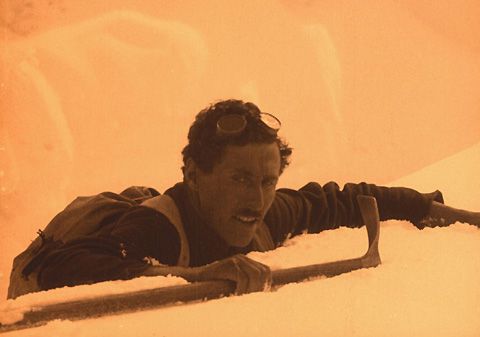
Scene from "Im Kampf mit dem Berge."
Source: CPO Records CD (my rip!)
Formats: FLAC(RAR), DDD Stereo, mp3(320)
File Sizes: 282 MB / 161 MB (FLAC version incl. covers & booklet)
The FLAC link has now expired. No more requests for this, please!
mp3 version – https://mega.co.nz/#!DQ0ykC4T!jHbErps2LZT92ak1MNiK2htJhXxeWYgK4RiBc7s aE6Y
Enjoy! Don’t share! Buy the original! And please click on "Like" if you downloaded this album! 🙂
Modern: Neo-Classical
An inspired collection of 20th century Italian neoclassical composers re-creating the
music of their Baroque forefathers in the advanced harmonic style of their own time.
Music by Gian Francesco Malipiero & Luigi Dallapiccola
And Alfredo Casella & Ottorino Respighi
Played by the Orquesta Filarm???nica de M???laga
Conducted by Aldo Ceccato
"Born in Milan, Aldo Ceccato studied at the Conservatorio Giuseppe Verdi and perfected his art
of conducting at the Musikhochschule in Berlin. He then became assistant to Sergiu Celibidache,
with whom he also continued his studies. He is a member of the Accademia di Santa Cecilia, Rome,
and holds an honorary doctorate from Eastern Michigan University. He has been honoured with the
titles of both Commendatore and Grand’ Ufficiale by successive Italian presidents, and Cavaliere
di Gran Croce, Italy’s highest honour. He has also been awarded the Brahms Medal by the Senate
of Hamburg, one of the highest cultural accolades in Germany.
Aldo Ceccato has previously been Musical and Artistic Director of the Detroit Symphony Orchestra,
the Meadow Brook Festival, the State Philharmonic Orchestra in Hamburg, Norway’s Bergen
Philharmonic, the NDR Orchestra in Hannover, the Italian Radio Symphony Orchestra in Turin,
the Spanish National Orchestra in Madrid and the Czech Philharmonic of Brno. He is currently
Music Director of the Foundation I Pomeriggi Musicali of Milan, one of the oldest orchestras in
Italy, succeeding many illustrious conductors over the years (Abbado, Bernstein, Celibidache,
Chailly, Dallapiccola, Giulini, Hindemith, Honegger, Maazel, Maderna, Muti and others). He is
also Conductor Laureate of the Czech State Philharmonic Orchestra of Brno with whom he has
performed at the Prague Spring Festival and toured Europe, including a prestigious visit to
Rome for a special concert in the Vatican for the Pope."
Source: La Bottega Discantica CD (my rip!)
Formats: FLAC(RAR), DDD Stereo, mp3(320)
File Sizes: 353 MB / 191 MB (FLAC version incl. cover)
The FLAC link has now expired. No more requests for this, please!
mp3 version – https://mega.co.nz/#!DV8RhDKZ!V38LfR_sV8pViWuz36E5-Vkaosov_75M2FBiI95QKIc
Enjoy! Don’t share! Buy the original! And please click on "Like" if you downloaded this album! 🙂
Modern: pre-1945 tonal
From 2005 to 2011 the Orchestra of the Dresden State Operetta under Ernst Theis recorded a
body of works known as the Rundfunkmusiken. Almost all the German radio networks had commissioned
these compositions from the best-known contemporary composers toward the goal of developing works adapted
to the technical resources of the new mass medium. The generic boundaries within contemporary music from
the early days of radio were not fixed – as the names of the composers demonstrate: Kurt Weill, Paul Hindemith,
Pavel Haas, Ernst Toch, and Franz Schreker, who went into music history as important innovators
from that era, numbered among the intended circle of composers. The Rundfunkmusiken are like an interface
between popular music and all the many different trends in classical music during the Weimar Republic. They
display hardly known facets of a music created for radio audiences and deriving its strength from the innovations
of that particular period. These musical experiments written for live transmission over nothing more than a
single microphone know no musical boundaries. Dance and jazz occur side by side with classical symphonic
forms and the latest avant-garde innovations. You will hear remarkable radio suites and overtures
by Franz Schreker, Ernst Toch, Eduard K???nnecke, Mischa Spoliansky, Max Butting,
and Walter Braunfels.
Music by [see above]
Played by the Orchester der Staatsoperette Dresden
Conducted by Ernst Theis
"During the late 1920s, the various newly established German broadcasting companies embraced
new music in particularly enterprising and innovative ways through commissioning some of the
country’s leading composers to write music specifically tailored to the medium. Since audio technology
was rather primitive at that time, it was something of a challenge to come up with substantial works
which also sounded effective on loudspeakers with a limited dynamic range.
Yet judging by the range of music featured in this fascinating collection, composers were inspired to
produce pieces that were both stimulating and attractive. Effectively what we get here is a
marvellous cross-section of the varied stylistic preoccupations that were in vogue during the
last years of the Weimar Republic. The most serious and musically substantial works, reflecting
an interesting cross-fertilisation between late-Romanticism and the so-called ‘new objectivity’,
are Franz Schreker’s resourcefully scored Kleine Suite and Walter Braunfels’s elegant Divertimento.
In contrast, Ernst Toch’s Bunte Suite and the two extended radio works by Max Butting are more
hard-edged, employing a dissonant musical language that is close to Hindemith. Lighter relief is
provided in the charming Charleston Caprice by Mischa Spoliansky and the T???nzerische Suite for
jazz band and orchestra by operetta composer Eduard K???nneke, a melodically appealing work
that proved so popular at the time that it was even commercially recorded by the Berlin
Philharmonic and released during the Nazi era.
Ernst Theis and the Orchestra of the Staatsoperette Dresden appear to be enjoying themselves
enormously throughout the K???nneke and deliver vibrant accounts of the rest of these works.
Strongly recommended."
BBC Music Magazine

At a German radio recording studio, 1920s.
Source: CPO Records CD (my rip!)
Formats: FLAC(RAR), Level: 5 – mp3(320, CBR)
File Sizes: 626 MB / 337 MB
Download Link – The FLAC link has expired. No more requests, please!
mp3 version – https://mega.co.nz/#!qNMGgY6b!QWy7eUSIZfcy3DbxFrDNFKCcp0hoBBlN9dk8n_P 0k4g
Enjoy! Don’t share! Buy the original! And please click on "Like" if you downloaded this album! 🙂
Modern: Light Music
Another delightful compilation of British light music lollipops, this time from the "grandmaster"
of the genre, known as "the British answer to Johann Strauss Jr" or simply "the man who wrote
tunes;" Eric Coates. And there’s a whole barrel lot of those on this delightful album. See back cover for details.
Music Composed by Eric Coates
Played by the London Philharmonic Orchestra
Conducted by Barry Wordsworth
"An entirely new collection delivered with polish and enthusiasm by the LPO under Barry Wordsworth.
I say "new" but it was in fact set down many moons ago (one of the tracks — the rollicking "The
Man from the Sea" from The Three Men suite — even made a tantalising appearance on a sampler
way back in 1993). Still, there can be no real grumbles with the production values (though I’d have
preferred a touch more ventilation and bloom), and Wordsworth directs proceedings with chipper ebullience.
Especially valuable here is the 1938 ballet The Enchanted Garden, Coates’s biggest orchestral canvas,
opulently scored and full of the most warm-hearted invention. Other plums include the roistering
"20th Century Rhythm" from the 1941 Four Centuries suite, glittering concert waltz Footlights
(1939) and exuberant 1934 march London Bridge (the follow-up to the previous year’s indelible
"Knightsbridge")."
Gramophone
Source: Lyrita Records CD (my rip!)
Formats: FLAC(RAR), DDD Stereo, mp3(320)
File Sizes: 399 MB / 175 MB (FLAC version incl. covers & booklet)
The FLAC link has now expired. No more requests for this, please!
mp3 version – https://mega.co.nz/#!WFF0iB5b!Yd7diwLn2Zz4nGNfqO72ENxx8Tajns2cykuhPVZ TnMg
Enjoy! Don’t share! Buy the original! And please click on "Like" if you downloaded this album! 🙂
Also thanks for ‘Eric Coates: A Compilation’.
Greatly appreciated.
Modern: Avantgarde
R.I.P. Gunther Schuller (1925-2015)
Gunther Schuller’s Spectra takes several ideas that were in the air in the mid 1950s and
merges them into something that is different from the sum of its parts and strikingly original. It was
written for a large orchestra, subdivided into six chamber ensembles – Schuller devised a radically
different seating plan for the musicians that makes performance practical and possible. Each ensemble
can operate independently but also interacts with the others to create one collaborative identity –
what Schuller, in his original program note, called a "web of sound." At a time when stereo recording
was being developed Spectra is also about music experienced in a spatial context. The music creates
and moves across an aural landscape that Schuller delineates precisely. Several other 20th-century
devices appear – vast waves of color, as in Var???se, for example, and the use of changing strands of
color as form and structure. Spectra also synthesizes the opposing manners of Schoenberg and
Stravinsky, 12-tone procedures propelled by driving rhythms. The whole thing adds up to an
astonishing 20-minute firebomb. Adventurous conductors have taken Spectra up as a mid-
20th-century classic. Former BSO music director James Levine, for example, conducted a
student performance as far back as 1968; he later conducted and recorded it with the
Chicago Symphony Orchestra.
Completed in 1955 to fulfill a commission for the Louisville Orchestra, Elliott Carter’s Variations
for Orchestra was first performed by that organization in April of 1956. While very much 1950s leading edge,
the work is nonetheless somewhat less severe than some of Carter’s other works, some of which were swamped
with jangling and inarticulate percussion effects. Based upon three musical ideas, the work is a group of
nine variations on an introductory allegro theme, all of which resides within a logical structure. Because
variation occurs in time, pitch, and register, the relationship among them becomes mathematical and the
listener may encounter frustration in attempting to sort and count them. The composer’s own descriptive
notes may or may not help: "Each variation has its own shape, too, as a mode of musical behavior,
helps define character."
Named after the circle of stars surrounding the sun, John Cage’s magnificent Atlas Eclipticalis was
completed in 1961, while the composer was working at Wesleyan University. In the Wesleyan Observatory,
Cage discovered some Czechoslovakian star maps. Guided by chance procedures, Cage placed transparent
sheets over the charts and converted the stars into notes, eventually producing 86 individual instrumental
parts. The parts consist of four pages of five systems, each system lasting 60 seconds. Curiously, each part
is dedicated to a friend, colleague, or family member, including several composers and Cage’s own parents
(the second trombone part). Aside from the used of untuned percussion and microtones, pitch is indicated
with traditional staff notation. Duration and loudness are shown graphically, by extended lines and the
size of the note heads, respectively. The general dynamic level is quiet; occasionally, though, notes
explode with great force.
Milton Babbitt’s Correspondences is a striking example of the rigid serial (twelve-tone) style
of composition that was regarded as "progressive" in 1950s and 1960s. The music consists almost entirely
of isolated and unpredictable tones, durations, colors, and, dynamics — momentary sparks and bursts
of sound-color. Surprisingly, if one does listen, without expecting the predictability of melodies, regular
rhythms or dramatic/emotional ideas, this ten-minute succession of tones is highly engaging, a freely
evolving mobile of sparks of musical color. To quote from Greg Sandow again (from another Village
Voice article) Babbitt "frees each note to dance with any partner it finds." There is unexpected joy in
listening to this process work out, particularly in hearing the many completely new combinations
of particular electronic sounds and string sonorities.
Music by [see above]
Played by the Chicago Symphony Orchestra
Conducted by James Levine
"Carter’s Variations may be relatively early (1956), but there’s still plenty of inventive energy and
fluctuating pace—in the central variations—to relate the discourse to the exploratory later works.
The general ambience is close to the Schoenberg of the Variations, or even Moses und Aron, but the
built-up tension and drama which explodes with the climactic trombone entry (21’20”) over attacks
on the timpani is reached in Carter’s own way. At that point and in other respects this new recording
compares favourably with the old CBS on LP with the New Philharmonia under Prausnitz (7/69—nla),
which represented the Variations on record for many years. The work reflects the serious and
questing aspect of Carter rather than the unbuttoned Holiday Overture.
Another performance of Cage’s Atlas Eclipticalis! In a single issue I reviewed no fewer than three
recordings—for three flutes (all Eberhard Blum on Hat Hut, through superimposition); for chamber
orchestra (The Barton Workshop on Etcetera) and for the full group (86 players) with the SEM
Ensemble (Wergo)—this is the work which flopped at a New York Philharmonic Concert in 1964.
Now players obviously relish the open experience of Cage, taking initiatives rather than fulfilling
routines. Perhaps the idea of a work based on star charts appeals. The result in this fourth
recorded realization, which has little connection with the others, is as authentically aimless as
the skies themselves. The playing is at a low dynamic level and there are silences: the timpani
take over from 6’18” to 6’59” and end the whole thing…"
Gramophone
Source: Deutsche Grammophon CD (my rip!)
Formats: FLAC(RAR), DDD Stereo, mp3(320)
File Sizes: 295 MB / 156 MB (FLAC version incl. covers & booklet)
The FLAC link has now expired. No more requests for this, please!
mp3 version – https://mega.co.nz/#!KUVGnIgB!em5eiox4dc1JE1Fv_x78PXUlcnOwxW4WXXdklKq 3W0c
Enjoy! Don’t share! Buy the original! And please click on "Like" if you downloaded this album! 🙂
Modern: pre-1945 tonal
If Karol Rathaus (1895-1954) and his symphonic works are largely unknown, it is primarily because
he himself kept them out of the repertoire, either from fear of criticism or from a deep need to keep his
music private. Perplexed by the storm of controversy surrounding the Frankfurt premiere of his dramatic
and harshly dissonant Symphony No.2 (1923), Rathaus withdrew it from performance, and the work
soon fell into obscurity. The tonal and lyrical Symphony No.3 (1942-1943) never entered the repertoire
because of Rathaus’ increasing reticence about having any of his works performed. This 2004 release from
CPO presents Rathaus first as a conflicted artist whose worth was not properly appreciated in Europe, then
secondly, as a somewhat happier, though guarded, composer during his American sojourn. The first work
requires some preparation for its stringent modernism and patience for its rather slow pacing, but it is
no more provocative today than, say, a symphony by Shostakovich. The Symphony No.3, on the other
hand, is lush and largely serene, as accessible as any American populist work of the time, and somewhat
reflective of Rathaus’ film music.
For another album with music by Karol Rathaus, see >No.71< (http://forums.ffshrine.org/f92/wimpel69s-could-film-music-classical-corner-work-121898/5.html#post2197398).
Music Composed by Karol Rathaus
Played by the Brandenburgisches Staatsorchester Frankfurt/Oder
Conducted by Israel Yinon
"Yinon and his Brandenburg Frankfurters seem to have this multilayered music well in hand, projecting
its visionary drama with force and conviction. Recording quality is up to cpo’s usual high standards.
Mention here should be made of recording supervisor and digital editor Horst Gobel, who passed
away not too long after these sessions. This writer corresponded with Herr Gobel—who was also an
excellent pianist deeply devoted to 20th-century repertoire—about our mutual admiration for the
works of Harald Genzmer, Heimo Erbse, and Eduard Erdmann. He was a very sophisticated
correspondent with a truly optimistic disposition; he will be sorely missed on the German recording
scene. Let us hope cpo goes on with his intention to record the stunning Erdmann Third Symphony
as well as their long-delayed integral symphonic cycle of the great Munich musician, Johann
Nepomuk David (1895–1977). Meanwhile, these two overwhelming Rathaus symphonies are
cause enough for general rejoicing right now. A Want List certainty."
Fanfare
Source: CPO Records CD (my rip!)
Formats: FLAC(RAR), DDD Stereo, mp3(320)
File Sizes: 362 MB / 179 MB (FLAC version incl. covers & booklet)
The FLAC link has now expired. No more requests for this, please!
mp3 version – https://mega.co.nz/#!qd8kDAIY!dO7RkQDd3QyrNGIwlp_8C_ZvvEFD139MhIGj0T9 wMR4
Enjoy! Don’t share! Buy the original! And please click on "Like" if you downloaded this album! 🙂
Modern: Neo-tonal
Leonard Bernstein’s Concerto for Orchestra, "Jubilee Games," represents an affirmation of the
composer’s Jewish faith. By 1986 Bernstein had certainly become one of the world’s most celebrated musicians.
That year the Israel Philharmonic celebrated its fiftieth anniversary with an extended tour of two continents.
On the programme was a new work in two movements entitled Jubilee Games, commissioned by the
orchestra the previous year. Bernstein commented that he hoped “one day to add another movement or two”.
Opening Prayer, for baritone solo and orchestra, was written to commemorate the gala reopening of Carnegie
Hall in December of the same year and was later appended to Jubilee Games. Bernstein was still not
satisfied and composed Seven Variations on an Octatonic Theme in early 1989. In the tradition of Bart???k’s
great work, Bernstein directed the first performance of his newly-titled Concerto for Orchestra, in four
movements, in Tel Aviv the following April.
The innovative first movement, "Free-Style Events," involves a greater degree of improvisation than in any
other Bernstein piece, and quotes the Old Testament, from Leviticus, in which Moses says: And Thou shalt
number seven Sabbaths of years unto thee, seven times seven years… shall be unto thee forty times nine
years… And ye shall hallow the fiftieth year, and proclaim Liberty throughout the land. Orchestral players
underscore the significance of the number seven (sheva in Hebrew) by whispering or shouting the number
seven times. Later, an exclamation of hamishim (fifty) is followed by fanfare signals from the brass, imitating
the motifs prescribed to the shofar, the traditional ram’s horn used to mark the fiftieth year as a holy year.
Several of these fanfares are heard on pre-recorded tapes. The theme and variation movement, smartly
titled "Mixed Doubles," is slow and sparse, contrasting tone colours with pairs of instruments invoking
the second movement of Bart???k’s work. Bernstein further utilised numerical association in "Diaspora Dances,"
opening in 18/8 time, and alluding to the practice of assigning numerical values to the Hebrew alphabet.
The word hai equals the number eighteen and, translated, means “life”. He said that this unique celebration
of the Hassidic spirit ranged “from the Middle East back to Central European ghettos and forward again to a
New York-ish kind of jazz”. The final movement, now with the title "Benediction," makes use of a melody
first employed nearly a half-century before, in one of Bernstein’s Anniversaries for piano solo.
Ned Rorem’s Violin Concerto was composed in Nantucket during a five-week period in August
1984. In his own words: ‘It could sensibly be called Concertino since it is small scale, or Variations since
each movement depends thematically on the others, or Suite since the six titled sections imply a narrative.
Certainly it is not conceived in so-called sonata form. I conceive all non-sung pieces as though they were
songs—like settings of words that aren’t there. Twilight is formed from a rambling prologue followed by a
slow melody for strings, over which the soloist weaves a countertune like lace or velvet. Toccata-Chaconne,
built on a 23-times-repeated timpani figuration, rises jaggedly from a purr to a thunderclap, then reverses
itself and fades back into a purr. Romance Without Words, the title borrowed from Mendelssohn, is literally
a song from which the text has been excised. Midnight, a microsonic variation, is itself a Theme and
Variations. Toccata-Rondo is in spirit a false waltz, that is, a waltz in 4/4. As to the story, if there is
one unfolded through the six sections, let the sound divulge it. Dawn recalls Twilight, one tone lower,
with the solo and orchestral r???les exchanged.’
An orchestral work by the American composer David Del Tredici (b. 1937), Tattoo was
premiered in 1987 by Myung-Whun Chung and the Royal Concertgebouw Orchestra in Amsterdam,
which commissioned the piece to commemorate the 250th anniversary of the F. van Lanschot Bank
of the Netherlands. Del Tredici’s earlier compositions drew upon "Alice in Wonderland" for inspiration;
in 1980, he won the Pulitzer Prize for his "In Memory of a Summer Day" from "Child Alice". Tattoo
is a darker, more agitated work, as the composer explains in this program note: "Tattoo is not Alice.
Those earlier pieces – extravagant, ecstatic and, yes, innocent – are some distance from the darker,
more ominous tread of Tattoo. True, the elaborate orchestral apparatus is still enthusiastically in
place and the harmony remains richly tonal, though now, perhaps, it bears a more dissonant
burden. But what seems a new twist is the music’s unrelenting rhythmic drive. Interestingly, a
recurrent image during composition was that of a juggernaut – the huge machine moving forward
with irresistible, terrible force. The orchestra is, after all, a kind of musical monster, with its more
than 100 independently moving parts, each of which, like tentacles, can be given its own life;
or all can be harnessed together to do a composer’s bidding."
Music by Leonard Bernstein, David Del Tredici & Ned Rorem
Played by the New York & Israel Philharmonic Orchestras
With Gidon Kremer (violin)
Conducted by Leonard Bernstein
"These recordings from 1988 and 89 show that Leonard Bernstein was a vital force as a
composer and as a conductor of American music up until the end of his life. All the works
on this album were written in the 1980’s. Del Tredici’s Tattoo is a virtuoso showpiece with
a take on Paganini’s 24th Caprice. It requires awesome conductorial technique and ears,
which Bernstein has. Rorem’s Violin Concerto is a beautiful, meditative piece. I also have
Phillipe Quint’s recording of it on Naxos, but Gidon Kremer inhabits the work to a greater
degree. Ned Rorem in his diaries voices his approval of this performance. These two works
feature the N.Y. Philharmonic in Avery Fisher Hall. It is notable how much better the
orchestra played for Bernstein at this time than it did for much of his tenure as its music
director. The sound engineering conveys the feeling of being in the hall to an unusual
degree. Bernstein’s Jubilee Games features the Israel Philharmonic, for whom it was
written. It is a clever work, alternately vigorous and meditative, with some beautiful
mood painting in the softer passages. These recordings were not issued until after
Bernstein’s death, and they form a fitting memorial to him."
Amazon Reviewer
Source: Deutsche Grammophon CD (my rip!)
Formats: FLAC(RAR), DDD Stereo, mp3(320)
File Sizes: 319 MB / 167 MB (FLAC version incl. covers & booklet)
The FLAC link has now expired. No more requests for this, please!
mp3 version – https://mega.co.nz/#!uJ0SUZQJ!FWacGHw5bsbmOCYq-xgSTwrRiGLbOMd-cY3S0-2Axfc
Enjoy! Don’t share! Buy the original! And please click on "Like" if you downloaded this album! 🙂
Late-Romantic
Richard Strauss’s own Fantasia from Die Frau ohne Schatten has three rival recordings in the catalogue,
as does Clemens Krauss’s Liebe der Danae ‘symphonic fragment’. But Karl Anton Rickenbacher’s own
extraction of music from Die ???gyptische Helena is indeed a rarity. As, of course, is the opera itself, which
makes this an ideal means of exploring a rich vein of music from the Straussian mine. The music may not have
the immediate appeal and memorability of Die Frau or Danae. However, there is still plenty of engaging
melody and typical harmonic audacity displayed in the fragment’s 22 minutes, taken largely from extended
passages of Act I, including what a delightful typo in the booklet renders as a ‘duct between Helen and Menelaus’.
Music Composed by Richard Strauss
Played by the Bamberger Symphoniker
Conducted by Karl Anton Rickenbacher
"Rickenbacher draws full-bodied, committed playing from the Bamberg orchestra. The well-known
orchestral interludes from Die Frau have energy and tonal richness, while the 12-minute
encapsulation of Danae is at times quite overwhelming in its power and authority. The
recorded sound is admirably warm and enveloping."
BBC Music Magazine
Source: Koch Schwann CD (my rip!)
Formats: FLAC(RAR), DDD Stereo, mp3(320)
File Sizes: 230 MB / 130 MB (FLAC version incl. covers & booklet)
The FLAC link has now expired. No more requests for this, please!
mp3 version – https://mega.co.nz/#!WJ1mmbpC!XJZEzOeXYXFhQxQUdWsCq9qdViyKMHeCZV82iTm dlak
Enjoy! Don’t share! Buy the original! And please click on "Like" if you downloaded this album! 🙂
Many thanks, wimpel!
Modern: Neo-tonal
Havergal Brian’s (1876-1972) three-part symphonic poem In Memoriam was composed at Trentham,
Stoke-on-Trent, in 1910 and completed on 27 October of that year. Essentially an extended symphonic study in
the slow-march rhythms which fascinated the composer throughout his career, in the context of Brian’s early
achievement it is a major work. The first part has a six-bar introduction (headed Invocation in the manuscript),
starting with a funeral-march rhythm in solo timpani and swelling out to introduce most of the orchestra (a large
one, with triple woodwind, two harps, and organ). This is the first example of a species of opening Brian was to
use in several of his symphonies, such as Nos. 8, 10, and 13. This initial rhythm, and the nagging triplet figures
which immediately develop from it, have an important secondary r???le to play in the unfolding structure. After a
huge climax, the music gives way to the second part, Andante ma solenne e religioso. In the manuscript this was
in fact designated ‘Religious Scene’, and it begins quietly in muted strings—the four-part texture carries a hint
of choral singing—with an extended theme which appears to quote from the National Anthem.
Despite its original function as a symphonic finale, Festal Dance is in a ternary scherzo form, and is
notable for the ‘advanced’ nature of Brian’s scoring, particularly the use of the percussion ensemble. Although
there are Straussian aspects to this, the general orchestral style is very different, its fierce abandon suggesting
affinities perhaps with the works which Prokofiev was to write over a decade later, such as the ballet Chout.
Five decades and a radical metamorphosis of musical language separate Festal Dance and In Memoriam
from Brian’s Symphony No.17, composed at Shoreham-by-Sea, Sussex, in the last months of 1960 and
completed in early January 1961. Symphony No.17, in one movement, marked a change of emphasis from the
preceding four symphonies towards a relatively smaller scale and an orchestra of more orthodox size—though
Brian retains a large percussion body and pairs the tuba with a euphonium. At the age of nearly 85, he had
much to say, but said it tersely, in a swiftly-moving train of thought. Development is continuous, multitudinous
contrasts of mood and texture following each other with sometimes bewildering rapidity.
The Symphony No.32 in A flat, Brian’s last and indeed the last work of any kind that he completed, is
superficially far more orthodox in layout, in four movements with a slow movement and scherzo placed second
and third respectively. However, the last two movements play without a break and the overall effect is rather
of a structure in two large halves, the first moderately-paced and brooding, the second fast and energetic.
Brian composed this symphony in his final home, a council flat overlooking Shoreham Beach, at the age of 92.
In the way it continues to explore Brian’s inner world and find new landscapes of the mind, and in its characteristic
compound of dark, difficult thoughts and defiant affirmation, Symphony No.32 in the same key as the First
Symphony of Brian’s lifelong hero Elgar—represents a satisfying termination of his creative output.
Music Composed by Havergal Brian
Played by the RT??? National Symphony Orchestra of Ireland
Conducted by Adrian Leaper
"Originally released on Marco Polo, these fine performances make a welcome return on Naxos. In Memoriam
and Festal Dance are early Brian: tuneful, somewhat heavily scored, and in the latter (which is based on
the tune “Three Blind Mice”, or possibly “Here We Go ‘Round the Mulberry Bush”), quirkily humorous. The
two symphonies are quite different–with their abrupt contrasts, flashes of lyricism, heavy-footed marches,
and evocative bursts of color in strange places, they certainly won’t be to all tastes, but they have great
character and a distinctive voice (in a good way)."
Classics Today
Source: Marco Polo CD (my rip!)
Formats: FLAC(RAR), DDD Stereo, mp3(320)
File Sizes: 253 MB / 136 MB (FLAC version incl. covers & booklet)
The FLAC link has now expired. No more requests for this, please!
mp3 version – https://mega.co.nz/#!eA8BBRwD!SmFutSJgUBJXpTUn0X3h3Ww8AvbJ93QMEYV4aGP pt3Q
Enjoy! Don’t share! Buy the original! And please click on "Like" if you downloaded this album! 🙂
Modern: Light Music
The second volume of Dutton’s enterprising series on British Light Music Premieres is an
even more colorful lot than the first. There are several odd men out here, some of them not even British.
John Field’s Concertino for Flute and Small Orchestra is based on three piano pieces,
arranged and orchestrated by Philip Lane for the flutist Jennifer Stinton. Lane also
provided the arrangement of Rimsky-Korsakov’s concert band-original of Variations on a
Theme of Glinka. Another foreigner’s music, that of Georges Bizet, was arranged by
Leonard Salzedo for a ballet based on Bizet’s Carmen.
Anthony Hedges, Carlo Martelli, Haydn Wood and Richard Addinsell
otoh are fairly well known purveyors of the genre, and are represented on the album by very
typical pieces – some slight, some more substantial. Hedges’ work in particular though seems an odd
choice even among the other strange bedfellows. Performances recorded in London and Prague,
mostly under the familiar leadership of Gavin Sutherland.
Music by [see above]
Played by the Royal Ballet Sinfonia & City of Prague Philharmonic Orchestra
Conducted by Gavin Sutherland & Julian Bigg
"Although Gavin Sutherland is at least nominally the principal orchestra leader here,
appearing with the Royal Ballet Sinfonia, three orchestra/conductor combinations are
utilized. Neil Thomson leads his own band in three petits riens by film composer Carlo
Martelli and Julian Bigg takes the City of Prague Philharmonic through Leonard Salzedo’s
orchestration of the Pas de Deux from Georges Bizet’s opera Carmen. Among other
arrangements, one finds Philip Lane’s Concertino for flute and small orchestra, based
on three disconnected movements of John Field, which, though credited here to Field,
ends up sounding nothing like him. Lane also contributes an arrangement for oboe
and orchestra of Rimsky-Korsakov’s Variations for oboe and military band in G minor
that likewise succeeds handsomely in not sounding anything like Rimsky-Korsakov.
As to the remainder, it is an arrangement that does grab the brass ring among the
pieces collected here, one for orchestra by conductor Sutherland of Richard Addinsell’s
brief but thoroughly enchanting piano piece Harmony for False Lovers. Running only
2:40, this is the only work on British Light Music Premieres and Arrangements, Vol. 2,
that unequivocally qualifies as "British light music," and it is a gem, easily the best
thing on the disc. Haydn Wood’s British Rhapsody and Lane’s Overture on French
Carols are lightweight, but obviously serious in intent, and Anthony Hedges’ biting
and largely bi-tonal Festival Dances, Op. 64, aren’t "light" in the least."
All Music
Source: Dutton Epoch CD (my rip!)
Formats: FLAC(RAR), DDD Stereo, mp3(320)
File Sizes: 378 MB / 175 MB (FLAC version incl. covers & booklet)
The FLAC link has now expired. No more requests for this, please!
mp3 version – https://mega.co.nz/#!LRczkRbD!TOJHT3BnN9BUNDK2FwHniCmnSPEKMGLakHLEE4C FHo4
Enjoy! Don’t share! Buy the original! And please click on "Like" if you downloaded this album! 🙂
It’s off topic to music downloading.
Petros, this isn’t your thread. Please go to the General Discussion thread if you wish to discuss politics.
http://forums.ffshrine.org/general-discussion/
Further posts about politics will also be deleted.
Thank you for understanding.
This is the downloading section.
You can discuss the music posted or things related to to it.
But you cannot go off-topic and talk about politics or religion or whatever you want.
This section of the forum has lacked a mod for some time but now I am helping.
No one will be spoiled any more.
Take the advice or take it somewhere else.
Any more off-topic or belligerent posts and you will get warnings.
I also implore you to not respond to anyone. It will only provoke more off-topic posts.
Things only need be said once. Leave it to the OP of the thread.
If you wish to convey support, use the "like" button or give reputation.
There’s no need to reply and continue the chain of off-topic posts.
Thank you for understanding.
———- Post added at 08:19 PM ———- Previous post was at 08:18 PM ———-
This also includes disrespectful behaviour towards other members, including moderators.
Modern: Pre-1945 Romantic
In a friendly competition with his Swedish colleague Natanael Berg, Kurt Atterberg (1887-1974) composed
his Fourth Symphony in 1918. They had decided that each should write a piece lasting no longer than twenty
minutes (a stipulation which neither of them managed to achieve. Atterberg’s symphony, full of humour and wit,
has proven popular and received many performances; its language is open and simple, almost neoclassical.
It also includes numerous quotations from Swedish folk music. The orchestration is attractive and
charming. Sinfonia piccola was first performed in Stockholm in March 1919.
Atterberg was well-established in Scandinavian musical circles when he wrote his Symphony No.6,
which came to be known as the Dollar Symphony because of the major prize it won. He was Principal
Clerk of Sweden’s National Patent Office, in addition to his musical life as composer, cellist, critic, and
conductor. His knowledge of intellectual property law made him a leader in organizing the Swedish
copyright organization, STIM, as well as forming the Swedish Society of Composers. Atterberg began
sketching this work early in 1927 in open score. By November he decided to make it a symphony and
had written much of the first two movements. Then Atterberg learned that Columbia Records had
planned to mark the centenary of Franz Schubert’s death with a competition to complete Schubert’s
"Unfinished" Symphony. But complaints that it would be sacrilege to complete the divine symphonic
torso convinced Columbia to alter the terms of the competition to instead reward the best original
symphony "in the spirit of" Schubert, and had extended the entry deadline accordingly, allowing
Atterberg to enter the 33-minute symphony.
The opening movement, Moderato, is an earnest symphonic structure. The main theme is
lighthearted, but there is considerable musical drama. The movement’s coda (written after
learning of the competition) is, if anything, even more conservative than the music of the rest
of the movement. The middle movement, Adagio, is in Atterberg’s best vein of Swedish folk-
influenced music and contains a notable clarinet solo. The finale, Vivace, evidently originated as
an idea to write a piece based on an intentionally trivial theme. When Atterberg read the rules
of the competition (which were, as he wrote, practically "an incitement to reactionary music-
making"), and having in mind the pompous style of American advertising, he decided to use
this concept as the basis for a rather sarcastic conclusion.
In 1916, Atterberg was appointed conductor and composer at the Royal Dramatic Theatre
(Kungliga Dramatiska Teatern, or ‘Dramaten’) in Stockholm. In 1918 he was also asked to compose music
for a production at the Intimate Theatre (Intima Teatern, or ‘Intiman’) of Soeur B???atrice
(Sister Beatrice), a Miracle, or mystery play, by the Belgian Nobel Prize winning playwright
Maurice Maeterlinck. He only had space for three musicians, playing violin, viola, and harmonium.
Atterberg reworked his music in 1921 by replacing the harmonium with a string orchestra, and
known as Suite No.3 the work has become one of Atterberg’s most frequently
played compositions. It is a small masterpiece, notable for both its beauty and passion.
Music Composed by Kurt Atterberg
Played by the Gothenburg Symphony Orchestra
With Sara Trob???ck Hesselink (violin) & Per H???gberg (viola)
Conducted by Neeme J???rvi
"In all these performances Neeme J???rvi’s animated conducting style works to the advantage
of the music. His spirited account of the fast music is most exhilarating, but while he maintains
a urgent momentum he is always responsve to the many beauties and natural flow of the
slow sections of these works. It goes without saying that the playing of the Gothenburg
Symphony Orchestra for their Principal Conductor Emeritus is totally idiomatic throughout.
The engineers … have achieved an open, clear and quite ravishing sound quality … This
is a most successful release of unfamiliar Scandinavian music that can be wholeheartedly
recommended."
SACD Net
Source: Chandos Records CD (my rip!)
Formats: FLAC(RAR), DDD Stereo, mp3(320)
File Sizes: 318 MB / 177 MB (FLAC version incl. covers & booklet)
The FLAC link has now expired. No more requests for this, please!
mp3 version – https://mega.co.nz/#!rE12nY4K!Ms_dPScPyDhVaqSyBwguwkofc1QolAKLeI0sk5a W5Fw
Enjoy! Don’t share! Buy the original! And please click on "Like" if you downloaded this album! 🙂
Modern: Light Music
Ernest Tomlinson R.I.P. (1924-2015)
"Born in Lancashire in 1924, Ernest Tomlinson wrote light orchestral pieces which
became a well-loved fixture on radio, television and stage in the decades following World
War II. He had his first piece broadcast in 1949 and six years later, he formed the Ernest
Tomlinson Light Orchestra.
Tomlinson produced a wide range of works – including overtures, suites, rhapsodies and
miniatures. His Little Serenade and Suite of English Folk Dances – particularly the
movement titled Dick’s Maggot – are regularly played on Classic FM. In the 1960s he
composed a number of pieces for the test card, including Stately Occasion and
Capability Brown .
“Ernest Tomlinson will be warmly remembered as long as people enjoy listening to
melodic music,” said Classic FM presenter Catherine Bott.
“Light music is all about melody and enjoyment, always beautifully crafted and full
of colour,” she said. “Ernest was among the very best of British light music composers,
his exceptional technical skills allied to a rare gift for melody.”
Tomlinson also composed several symphonic works in a jazz style. In 1966, when
he conducted his Symphony ’65 in the Tchaikovsky Hall, Moscow, it was the first
time such a work had been heard in Russia.
"He was a good composer," conductor Iain Sutherland told Classic FM. "His gift of
melody and harmony was backed up by his brilliance as an orchestrator. His music
has been part of my professional life since I started broadcasting 45 years ago
right up to the present."Classic FM
You’ll also find music by Ernest Tomlinson >here< (http://forums.ffshrine.org/f92/wimpel69s-could-film-music-classical-corner-work-121898/9.html#post2212601).
Music Composed and Conducted by Ernest Tomlinson
Played by the Slovak Radio Symphony Orchestra
"Marco Polo offers sound that is as bright, warm, spacious, detailed,
and precisely focused as the performances."
American Record Guide
"This release is one of this writer’s particular favourites in a
cornucopia series which never seems to run out of steam."
Fanfare
"Ernest Tomlinson’s orchestral pieces charm by the frothy lightness of the scoring.
The winningly delicate Little Serenade, which opens the disc, is most famous, but
the gentle, evocative Kielder Water, the captivating Canzonet from the Silverthorne
Suite and the Nocturne are hardly less appealing. Love-in-a-mist is as intangible as
it sounds, with the most fragile of oboe solos, and it is not surprising that Sweet and
Dainty has been used for a TV commercial. There is robust writing, too, in the
Folk Dance Suite—but not too robust, although the jolly English Overture begins
with Here’s a Health unto His Majesty and certainly does not lack vitality. The
music is played with much grace and the lightest possible touch by the remarkably
versatile Slovak Radio Orchestra under the composer, and the vivid recording has
delightfully transparent textures, so vital in this repertoire."
Penguin Classical Guide
Source: Marco Polo CDs (my rip!)
Formats: FLAC(RAR), DDD Stereo, mp3(320)
File Sizes: 259 MB / 159 MB + 276 MB / 141 MB (FLAC versions incl. covers & booklets)
The FLAC links have now expired. No more requests for these, please!
mp3 versions – Volume 1: https://mega.co.nz/#!iUMUASIS!zaMTGDMpD-sCUNPPz3mTwCfqluBPw1tUhxBO9Jq3z0I
Volume 2: https://mega.co.nz/#!CZcSCBbL!9zq4TIIDHlWKEFWAWnAzoqd_eALPV08yqJ5v3ke zUSU
Enjoy! Don’t share! Buy the original! And please click on "Like" if you downloaded this album! 🙂
Modern: Avantgarde/Neo-Tonal
Grammy Award-winning composer Michael Daugherty explores three icons of “The Greatest Generation”,
a turbulent period of adversity and achievement in the United States of America spanning the Great Depression
of the 1930s through the Second World War. Mount Rushmore is a dramatic oratorio inspired by the monumental
sculpture of four American presidents carved into the Black Hills of South Dakota. Radio City is a symphonic
fantasy on the legendary Arturo Toscanini, who conducted the NBC Symphony Orchestra in live radio broadcasts
heard by millions across America. The Gospel According to Sister Aimee is an organ concerto inspired by the
rise, fall and redemption of religious celebrity Aimee Semple McPherson.
Music Composed by Michael Daugherty
Played by the Pacific Symphony Orchestra
With Paul Jacobs (organ)
And the Pacific Symphony Chorale
Conducted by Carl St. Clair
"Michael Daugherty was born in 1954 in the United States, the eldest of four musical brothers,
he shot to international fame in 1994 with his Metropolis Symphony. Rejecting influences that
emanated from the Second Viennese School, he is travelling down a path that is far more
congenial to audiences, yet is sufficiently progressive to generate new sonorities. The first
work on the disc pictures the sculpture of the four American presidents on Mount Rushmore
in a big and bold score lasting over half an hour and scored for chorus and orchestra, and
text based on the words of the great politicians. Almost as long is Radio City: Symphonic
Fantasy on Arturo Toscanini and the NBC Symphony Orchestra, a work recalling the legendary
live broadcasts that captivated the nation for almost twenty years from 1937, its three
movements using quotations from music he performed—though they are well ‘hidden’. The
final three tracks reflect The Gospel According to Sister Aimee, Aimee Semple McPherson
being a religious personality in the 1930s who, to some, fell from grace in her private life.
Calling on the orchestra for a considerable show of virtuosity, the Pacific Orchestra and its
conductor, Carl St.Clair, obviously relish the challenge. Paul Jacobs is the brilliant organist,
and the big, noisy and hard-hitting sound comes from the orchestra’s home in Costa Mesa,
California."
David’s Review Corner
Source: Naxos CD (my rip!)
Formats: FLAC(RAR), DDD Stereo, mp3(320)
File Sizes: 380 MB / 178 MB (FLAC version incl. covers & booklet)
The FLAC link has now expired. No more requests for this, please!
mp3 version – https://mega.co.nz/#!rF8jiZ7C!Uz5TsLvebv5GmBq6qAmDnhcX-wh6TETGagiKpPOhdQs
Enjoy! Don’t share! Buy the original! And please click on "Like" if you downloaded this album! 🙂
Late-Romantic
Unjustly neglected today by comparison with his contemporaries Debussy and Ravel, Vincent d’Indy (1851–1931)
nevertheless fully deserved Faur???’s title, ‘The Samson of Music’, for his multifarious and generous-minded work as a
composer, conductor, educationalist and propagandist, which greatly strengthened French musical culture. It was
probably his rabid anti-Semitism that caused the composer his posthumous reputation.
D’Indy had conceived his previous work in symphonic form, Symphonie sur un chant montagnard fran???ais,
Op.25, composed in 1886, as a hymn to the natural surroundings of his Ard???che region. By contrast, the
Second Symphony, of 1902–03, is highly ambitious both in its philosophical scope and in its reflection of
his pedagogical ideas, notably the symbolic importance of cyclic motives recurring across movements. In
accordance with his Roman Catholic beliefs, he deemed the concept of the classical-romantic four-movement
symphony to be analogous to the harmonious architectural structures of the great mediaeval Gothic cathedrals.
A stylistic conflict of tradition and innovation is played out in the symphony with superb musical character and flow.
A patriotic Frenchman as he undoubtedly was, d’Indy was at the same time a lover of the German speaking
world and its culture. Dedicated to his friend Jules Bordier (d’Angers), Tableaux de voyage – an orchestral
version from 1892 of six pieces drawn from the original set of thirteen for piano solo of 1889 – evoke his
impressions during hiking holidays in the Black Forest and Tyrol. Though seemingly simple, they are nevertheless
full of compositional sophistication. A particular feature is the characteristic romantic device of mediant
relationships – unrelated chords and keys a third apart – to create a sense of expansiveness and mystery.
D’Indy preserved three characterful pieces from his incidental music for the long forgotten play Karadec
by Andr??? Alexandre in a charming Suite for small orchestra, made in 1890. The march-like ‘Pr???lude’, in G minor,
is based on a spikily rhythmic theme in folk style, the subdominant note raised to C sharp. A slower middle
section brings thematic contrast and reaches a powerful climax as the march tune reappears in augmentation,
in the remote tonality of B minor. The gentle E flat major flute melody of the ‘Chanson’ is treated to contrapuntal
elaboration before reappearing in the horns, violas and cellos. Finally, the theme of the ‘Pr???lude’ is heard in
augmentation, leading to a brisk five-bar coda.
Music Composed by Vincent d’Indy
Played by the Iceland Symphony Orchestra
Conducted by Rumon Gamba
"In the new Chandos recording Rumon Gamba and the Iceland symphony Orchestra capture
d’Indy’s abstract sonic landscape very well, achieving a warmth considerably more
Mediterranean than the climate of Reykjavik. Gamba has a sure sense of how to treat
the work’s characteristic sound, in which d’Indy maintains the definition of individual
instruments or orchestral groups (such as threatening brass) while combining them with
an integrated, rounded blend, which the recorded acoustic fully conveys."
International Record Review
Source: Chandos Records CD (my rip!)
Formats: FLAC(RAR), DDD Stereo, mp3(320)
File Sizes: 266 MB / 167 MB (FLAC version incl. cover & booklet)
The FLAC link has now expired. No more requests for this, please!
mp3 version – https://mega.co.nz/#!DdMhwSKB!-ZZTulKiFJIc934KX_0hAVOAYHuTMPxF-CXRs7It-fI
Enjoy! Don’t share! Buy the original! And please click on "Like" if you downloaded this album! 🙂
Anyone interested in dramatic chamber music might want to check out d’Indy’s pupil Lekeu. I find his music to be even higher quality than those of his teacher’s or Franck’s (except Franck’s violin sonata). Too bad Lekeu died so early… There’s also Biarent who wrote one of the best piano quintets and cello sonatas I’ve heard. There’s something immensely attractive about dramatic chromaticism and scale distilled into intimate chamber forms. Sturm und Drang with a distinct sense of longing? I don’t know…
Modern: Neo-Classical
The pairing of Francis Poulenc and Reynaldo Hahn on this album may seem contrived merely because
of biographical parallels between the two men, for their musical approaches and styles are quite different, if not at
odds. Poulenc’s neo-Classical, dry, sarcastic wit of the Aubade are a world away from Hahn’s pretty, even precious,
Romanticism, which is unabashedly on display in La bal de B???atrice d’Este. However, the discerning listener may
find in Poulenc streaks of Hahn’s pensiveness and languor, which his comic antics never completely conceal; there is
in Hahn a buoyant, diatonic tunefulness that is readily found in Poulenc. (Interestingly, some of Poulenc’s own adaptations
of Renaissance music bear a remarkable similarity to Hahn’s antique pastiches in this ballet.) Furthermore, their
fondness for unusual chamber combinations is striking, and the transition from the Aubade to La bal de
B???atrice d’Este is not at all jarring because they both share the charm and ambience of the salon orchestra.
Coupled with Jacques Ibert’s edgy Concerto for Cello and Winds and his colourful, brilliantly
scored symphonic suite Paris and the 5th Chamber Symphony by Darius Milhaud.
Music by [see above]
Played by the Harmonie Ensemble New York
With James Kreger (cello) & Ralph Votapek (piano)
Conducted by Steven Richman
"Harmoniemusik" is music for classical wind ensemble. Harmonie Ensemble New York is something
altogether larger and more diverse. Founded in 1979 by conductor and music director Steven Richman,
today the Ensemble encompasses every form of performance from chamber ensemble to symphony
and chamber orchestra. Harmonie Ensemble New York has a broad and highly eclectic repertoire that
not only ranges from classical to contemporary, but includes symphonic jazz, and spirituals as well.
The group’s top-flight, highly versatile New York musicians are hand-picked from the classical and
jazz worlds by Maestro Richman.
The Ensemble’s uniqueness derives in part from Richman’s success at uncovering rare gems,
original orchestrations, lesser-known works and historic arrangements, including chamber and
symphonic works. The group also produces and performs the annual international Dvor???k Day
Concerts, and for many years presented the closing gala orchestral concerts at New York’s
Lincoln Center Out-of-Doors Festival. The versatility of Harmonie Ensemble New York (HENY)
can be seen in the diversity of composers celebrated in the historic concerts which
it has performed."
Source: Music & Arts CD (my rip!)
Formats: FLAC(RAR), DDD Stereo, mp3(320)
File Sizes: 277 MB / 158 MB (FLAC version incl. cover)
The FLAC link has now expired. No more requests for this, please!
mp3 version – https://mega.co.nz/#!vVFGQByR!6_Uyb6Faz8-SzXYdrKPqF-WTOehCEva3uEMOTV3NlSM
Enjoy! Don’t share! Buy the original! And please click on "Like" if you downloaded this album! 🙂
Modern: Neo-Tonal
Internationally renowned and award-winning composer Salvador Brotons brings classical music
into the here and now, depicting our contemporary world in his Fifth Symphony. Its first three movements
are musical representations of the more negative aspects of the human condition, before the slow, final
section offers a positive resolution. The Oboe Concerto brings out both lyrical expressiveness and
virtuoso thrills from the soloist, and the Four Pieces for String Orchestra was the prizewinning work
which brought acclaim and recognition to Brotons at the age of seventeen.
Brotons on his Symphony "Mundus Noster": "Composed during the summer of 2010 and
commissioned by the Orquestra Simf???nica de Barcelona Nacional de Catalunya, Symphony No 5
‘Mundus Noster’ has a form nearer to that of a symphonic poem than to pure music. With the intention
of establishing a closer communication with the listener, I have chosen to present situations of our
contemporary world in a musical context. In the first three movements I have sought to represent
objective realities and situations of our contemporary society. The last movement, however, is a more
personal vision on how to confront our surroundings from an individual perspective. Instead of labelling
the movements with Italian expressions of tempo, I have preferred to encapsulate the situations by
expressing them through specific titles."
Music Composed and Conducted by Salvador Brotons
Played by the Orquestra Simf???nica de Balears ‘Ciutat de Palma’
With Javier Arnal Gonz???lez (oboe)
"Music from the Spanish composer and conductor, Salvador Brotons, in three world premiere
recordings of music written in the present decade. Born in 1959 into a musical family, he first
studied flute with his father, continuing his education at the Barcelona Conservatory with Xavier
Montsalvatge as his composition mentor. Though his works have received many awards, it has
been as a conductor, both in North America and Portugal, that he has become best known. The
opening movement of the Fifth Symphony marks out his world of modern tonality, far removed
from the dead-end road of Second Viennese School atonality. It is a work that looks at life in the
21st century, each section being given ‘meanings’, the brass of the first movement representing
‘power/wealth’, the waltz of the second movement points to ‘hypocrisy’, and so forth. The result
is highly descriptive, and if the hard-hitting style of Shostakovich appears, so do hints of Mahler
and Hollywood as we eventually reach ‘hope’. The composer writes that the Oboe Concerto
works equally well as an Sonata or as three individual pieces. Surrounded by a very active
opening movement and a brilliant final Tarantella, the sad central Berceuse has some French
ancestry. Only qualifying for inclusion as a 21st century classic by virtue of a recent revision,
the Four Pieces for String Orchestra was the work that brought Brotons to international
attention back in 1977. Again with descriptive titles, it is often a powerful and extremely
likeable score. With the composer conducting the fine orchestra from the city of Palma on
the Mediterranean island of Mallorca, we can take these as benchmark performances, the
very nimble soloist, Javier Arnal Gonzalez, being the orchestra’s principal oboist. Very
punchy sound."
David’s Review Corner
Source: Naxos CD (my rip!)
Formats: FLAC(RAR), DDD Stereo, mp3(320)
File Sizes: 293 MB / 163 MB (FLAC version incl. covers & booklet)
The FLAC link has now expired. No more requests for this, please!
mp3 version – https://mega.co.nz/#!SEEyHIba!yiz7BtNBlvimcF4JwxFc9_MwnDjpVlLceWMiXNg Xhlg
Enjoy! Don’t share! Buy the original! And please click on "Like" if you downloaded this album! 🙂
By the way, a massive thanks for 787 ‘Ernest Tomlinson: Suites of Fok Dances, Comedy Overture, Aladdin, Light Suite, etc’ and also for 785 British Light Music Premieres, Volume 2. Excellent.
Fixed.
Modern: Light music
Archibald Joyce was known as ‘the English Waltz King’ and ran a very successful society
band playing for the very best balls and parties throughout the country in the years before
and after the First World War. He also composed many waltzes and other pieces that were extensively
played and recorded. Of the waltzes, Dreaming was the most popular, and a work like Song d’Automne
was even recorded by jazz legend, Sidney Bechet. Unlike his contemporaries Ket???lbey, Haydn Wood
and Eric Coates, however, he found it hard to adapt to the changing times and never wrote the suites
and characteristic pieces that would have enhanced his career. The waltz, A Thousand Kisses,
was so entitled following a remark by a friend at the sight of a beautiful woman coming into the
room – “she’s worth a thousand kisses!” The piece was obviously a known favourite of Charlie
Chaplin who included it in the music soundtrack he later added to his silent classic, The Gold Rush.
Music Composed by Archibald Joyce
Played by the RT??? Concert Orchestra
Conducted by Andrew Penny
"Archibald Joyce’s fleeting international fame as ‘The English Waltz King’ link him almost
indissolubly with the Edwardian ballroom. The waltzes that particularly earned him his
reputation – Dreaming, Songe d’automne and A thousand kisses – form the cornerstone
of this Marco Polo collection, and it is the impression of the opulence of an Edwardian
orchestra and ballroom that makes this collection so enjoyable. Most of the pieces here
are in waltz-time, with just a few in other tempos. There is, for instance, the rousing
Prince of Wales march, the march two-step Brighton hike, and a quite delightful polka
Frou-Frou. For those whose memories go back as far as mine, these last two evoke
the recollection of the ‘old time dance orchestras’ of the 1940s and 1950s for which
they were evidently composed.
In more ambitious vein is the 1916 stage score, Toto, from which we have a selection
newly adapted by Philip Lane, and the three-part Caravan Suite of 1926. One way
and another I confess that I did not expect to enjoy this CD anything like as much
as I did. There is an irresistible innocence, grace and charm to the music that clearly
captivated Andrew Penny and the RTE Concert Orchestra, and which they in turn
succeed in capturing quite magically for the listener.’"
Gramophone
Source: Marco Polo CD (my rip!)
Formats: FLAC(RAR), DDD Stereo, mp3(320)
File Sizes: 319 MB / 152 MB (FLAC version incl. covers & booklet)
The FLAC link has now expired. No more requests for this, please!
mp3 version – https://mega.co.nz/#!Xd10lKwT!RVebLxlZblTt2s9F4hmFvTWshMcmw9fscA5TmNR lb_A
Enjoy! Don’t share! Buy the original! And please click on "Like" if you downloaded this album! 🙂
Modern: Tonal
One of the most popular of Malcolm Arnold’s nine symphonies, the Symphony No.3 was commissioned
by, and is dedicated to, the Royal Liverpool Philharmonic Society. John Pritchard conducted the Royal Liverpool
Philharmonic in the work’s premiere performance at London’s Royal Albert Hall on December 2, 1957. Arnold has
cited the music of Jean Sibelius as being an important influence on his own compositions, and the thematic relationships
between the three movements of Arnold’s Third Symphony are reminiscent of similar processes in some of the
Finnish composer’s larger works. The first movement of the symphony, starting at an Allegro tempo, opens with a lyrical
theme played by the violins and violas, with woodwind support and nervous pizzicati underneath. Ideas pass mercurially
from instrument to instrument. Then a lovely new theme is introduced by the oboe, followed by other solo winds. This
new theme is juxtaposed with the more anxious setting of the first, leading to the development section. These same
two themes reappear as the movement abruptly speeds to a stormy Vivace concluding section. The second movement,
marked Lento, has been described by the composer as "elegiac in character." It is a passacaglia, a set of 20 variations
on a slow, dissonant chorale-like theme. More overtly tuneful than either of its predecessors, the third-movement
finale opens with playful woodwinds and a humorous "oompah" accompaniment. Starting at a brisk Allegro con
brio, the music speeds to Presto for the forceful coda.
The Symphony No.4 is unusual in several respects: it features catchy, pop-oriented themes; its
scoring requires an exotic array of percussion instruments, including tom-toms, bongos, and marimbaphones;
and it has a genuine sense of humor, an element often missing from large orchestral scores from the latter
half of the twentieth century. Moreover, it is quite accessible for the listener throughout all of its 40-minute
or so length. The first movement, marked Allegro-Poco pi??? mosso-Tempo primo, opens with ascending and
descending scales played in opposite motion, making up an important element here and later in the symphony.
The main theme is a leisurely, simple, somewhat Stravinskyian creation of neo-Classical character. A second
theme, lively and pop-like, is played to exotic, jazzy accompaniment. The central part of the movement
features imaginative thematic development and much conflict, with passages of rhythmic, jabbing brass
and insistent, pounding drums. There follows a reprise, but with considerable changes, and the movement
quietly ends. The ensuing Scherzo (Vivace ma no troppo) is largely subdued and lightly scored in its humorous,
often playfully menacing music. Lasting about five minutes, it is reminiscent of the spirit, though not style,
of the Scherzo of compatriot Vaughan Williams’ war-era Symphony No. 5. The third movement, Andantino,
exudes a rich sense of lyricism in its two themes, but exoticism surfaces again in the percussion writing.
Tension accrues and the music works up to a powerful climax before returning to the generally serene
mood dominating the movement. The Rondo finale features a busy, playful fugal main theme and a slower,
more sedate alternate one. The ascending/descending scale from the first movement also reappears here.
After the themes are developed, a boisterous, somewhat Ivesian march seems to come out of nowhere to
disrupt the proceedings. But the fugal theme returns to triumphantly close out the symphony.
Music Composed by Malcolm Arnold
Played by the Royal Liverpool Philharmonic Orchestra
Conducted by Vernon Handley
"Sober, strong, and staid, Vernon Handley’s conducting is a conduit through which the composer’s
music flows. His Edward Elgar has honest, idealistic sentimentality. His Vaughan Williams has mystical,
humanistic integrity. And his Malcolm Arnold has power, depth, and irrepressible vitality. This doesn’t
mean that Handley doesn’t have a strong artistic personality. But Handley conducts with the musical
equivalent of a paucity of adjectives and especially adverbs. Handley is the Hemingway of conductors,
a conductor who lets the nouns and especially the verbs do the work.
In this recording of Arnold’s Symphony No. 3 and No. 4 with the Royal Liverpool Philharmonic,
the results are sublime and ridiculous because the music is itself sublime and ridiculous. Arnold’s
Third is as great an English symphony as has ever been composed and its power, depth, and ferocity
have never been better served in recordings. Anyone who loves great English music will love this work
and this recording. And then there’s the Fourth, a work that does more then flirt with banality, it
embraces it with both arms and gives it a wet kiss. The Allegro’s big tune is the ironic theme for an
imaginary Ealing comedy. The Vivace ma non troppo is a dumb show of subdued virtuosity. The
Andantino is a hootchie-kootchie show with Little Egypt hiding behind orchestral veils. The closing
Con fuoco fugue is a vulgar parody of all contrapuntal conventions climaxing in the gaudy panoply
of a Technicolor faux coronation. And yet in Handley’s strong and sober conducting, even the banal
Fourth sounds like great music, banal music, true but nevertheless great music. Handley stoutly
resists temptations of sarcasm and irony and his unswerving belief compels listeners’ belief.
Conifer’s 1996 sound is warm and deep."
James Leonard, All Music
Source: Conifer/BMG CD (my rip!)
Formats: FLAC(RAR), DDD Stereo, mp3(320)
File Sizes: 336 MB / 158 MB (FLAC version incl. covers & booklet)
The FLAC link has now expired. No more requests for this, please!
mp3 version – https://mega.co.nz/#!aI8hxCra!Wx2zUrh46ztNt0xxTgp-ncf0Fz5418AHkYSKXChFELs
Enjoy! Don’t share! Buy the original! And please click on "Like" if you downloaded this album! 🙂
Btw i missed the second Symphony from this series ;O(
Modern: Neo-Classical/Tonal
The works included here are truly representative samples of a symphonic movement rather unknown
internationally and deserves special attention. Follet by Granados and Taltabull’s
Overture have remained unpublished until were recently published by??? Trit??? Editions. This
is the first label version of both works. Lamote de Grignon and Garreta, meanwhile, played a
decisive role in developing the Catalan symphonism because knew how to combine popular elements with the
classical tradition.
Music by Enrique Granados, Juli Garreta, Crist???for Taltabull & Joan Lamote de Grignon
Played by the Orquestra Simf???nica de Barcelona i Nacional de Catalunya
Conducted by Jaime Mart???n
"Aquest disc que Trit??? edita s’afegeix a tota una s???rie de registres que componen
indiscutiblement la m???s decidida i clara contribuci??? a la celebraci??? d’un passat
musical que certament cal con???ixer m???s i millor."
Vicent Minguet, Sonograma
"Nos deja la posibilidad de escuchar obras poco conocidas, todo en una buena
versi???n de la OBC y Jaime Mart???n al podio."
Jorge da Persia, La Vanguardia
Source: Trit??? CD (my rip!)
Formats: FLAC(RAR), DDD Stereo, mp3(320)
File Sizes: 202 MB / 130 MB (FLAC version incl. cover)
The FLAC link has now expired. No more requests for this, please!
mp3 version – https://mega.co.nz/#!LJkT1A7A!QCR7iq1oY26lc-N_Xe3xxnkrdH4ABghqej7WkMf-m3o
Enjoy! Don’t share! Buy the original! And please click on "Like" if you downloaded this album! 🙂
Modern: Neo-Romantic
Howard Hanson’s Symphony No.7 "A Sea Symphony" was his last work in the genre. Its music, valedictorian
and celestial in character, and its texts, derived from Walt Whitman’s Leaves of Grass, combine to clearly suggest a picture
of a life nearing its happy end. This view hardly assumes any element of controversy with the revelation that the composer
was in his 81st year when he wrote the symphony. The work is cast in three movements and generally lasts a bit less than
20 minutes. The opening panel, marked Largamente, begins quietly and mysteriously, the orchestra gradually swelling in
sound until the chorus intones the words "Lo, the unbounded sea," which comprise the subtitle for this movement. The
music then takes on an ethereal and somewhat triumphant character thereafter, striking the listener as more a choral
tone poem than a symphony. The second movement, at about four minutes, is the shortest of the three. Marked Adagio
and subtitled "The untold want," it clings to the same ethereal sense, but is somewhat bleak and much darker than the
opening panel. The finale begins briskly, with swirling energy from the orchestra (Allegro molto). Shortly after the
chorus enters with the words "Joy, shipmate, joy!" (again, the subtitle of the movement), the orchestra proclaims a
brief and grand quotation from the composer’s Symphony No. 2 "Romantic." The music soon turns restless, then
grows quiet before majestically building as the chorus serenely and triumphantly sings about the voyage toward
"unknown shores." The ending is ecstatic, conveying a sense of both confidence and joy.
Written during 1925-6, Pan and the Priest is an intriguing symphonic poem, which introduces a new rhythmic
clarity to Hanson’s compositional armoury. The opening idea sounds out mournfully, and appropriately, on cor anglais,
soon joined by clarinet and oboe, before strings add an atmospheric backdrop. The music grows more animated over
a steady pulse, reaching a short-lived climax, before solo wind effect a brooding return to the opening. Suddenly a
piano, marked obligato in the score, brings about a new impulsiveness, the music striding forward vigorously.
Lower strings introduce a new theme (6:28), which grows quickly in expressive ardour, while not neglecting the
more pensive mood heard earlier. The reappearance of the first idea presages the main climax, with both themes
passed excitedly around the full orchestra. The work closes in a mood of full-throated eloquence.
Rhythmic Variations on Two Ancient Hymns is one of Hanson’s least known works, and was thought to be
lost until quite recently. The first hymn emerges sombrely and spaciously, before a solo violin (1:29) sounds forth
its successor, melancholy and with just a hint of the archaic, over a halting accompaniment. This is combined in
canon on full strings, before the texture opens out and the hymns combine to draw this short, evocative piece
to its expressive conclusion.
Music Composed and Conducted by Howard Hanson
Played by the International Youth Camp at Interlochen Orchestra & Choir
With the Lyric Arts Quartet
"All these pieces are recorded here in good sound and in a live performance from 1977 (they
were originally published on a semi-private Silver Crest NMC 1977-25 LP) by the so-called World
Youth Symphony Orchestra of Interlochen, the youth orchestra gathered every summer at the
Interlochen National Music Camp, Michigan. In fact the Symphony was written to commemorate
the Camp’s 50th season and the Variations get here their premiere recording. A reviewer of another
Hanson-Interlochen release on Citadel 88110 has reviled the orchestra’s reading of the Second
Symphony and Merry Mount Suite (see Howard Hanson Conducts Hanson). I don’t have the
scores but I hear nothing offensive here.
The String Quartet was recorded in 1989. It is an early work from 1923, which makes its
passionate Romanticism more acceptable. The individual movements are not cued, but the
finale, starting at 13:57, has nice Ravelian overtones and the Quartet has at times an intensity
which announces Britten’s First Quartet.
In sum, this disc should provide enjoyment to those who can never have enough of Vaughan
Williams, especially his Sea Symphony."
Amazon Reviewer
Source: Bay Cities CD (my rip!)
Formats: FLAC(RAR), ADD Stereo, mp3(320)
File Sizes: 282 MB / 139 MB (FLAC version incl. covers & booklet)
The FLAC link has now expired. No more requests for this, please!
mp3 version – https://mega.co.nz/#!uZV0ADpQ!zwAPB-opHd2eM8DepkV-Q0NC4Jrzrdgi9_zd6EJ42xg
Enjoy! Don’t share! Buy the original! And please click on "Like" if you downloaded this album! 🙂
Modern: Avantgarde
On his father’s side a descendant of the Tokugawa Shogun family, who ruled over Japan from the 17th
to the 19th century, and on his mother’s from the Fujiwara family, who were the most powerful Japanese
court nobility from the 7th to the 12th century, Yoritsune Matsudaira (1907-2001) went on to become
one of the greatest Japanese composers of the 20th century. His music won the respect of Messiaen and
Takemitsu, and has been performed in Europe by many distinguished musicians. Matsudaira developed a
distinctive, modern style of his own based on the ancient Japanese court music, Gagaku, in which
various musical elements, including dance music (Bugaku) from Japan, China and Korea are brought
together. Written in the late 1950s, U-Mai (Right Dance), Sa-Mai (Left Dance) and Danza
Rituale e Finale, are presented on this recording in the form of a suite, following ancient Japanese
tradition. In these works Matsudaira attempts to integrate Gagaku with the avant-garde techniques of
Stockhausen and Boulez.
Music Composed by Yoritsune Matsudaira
Played by the Osaka Century Orchestra
With Ichiro Nodaira (piano)
Conducted by Ken Takaseki
"On this disc the opening Theme and Variations for Piano and Orchestra represents the tail end of his
first period when French neo-classical influence was still evident. This contrasts greatly in style
with the other, later works on the disc. The theme for this work is taken from Gagaku and played
unadorned only by the orchestra. The piano enters with a solo marked andante at the beginning
of the first of six variations which are seamlessly constructed. The writing becomes increasingly
animated during the second and third variations. In the latter, the music is dodecaphonic and the
influence of jazz rhythms evident. The fourth variation is a lyrical nocturne and is followed by two
rhythmic allegros with the final variation marked Toccata meccanica. The final section of this
variation adopts a slower tempo and ultimately the music comes to a natural, unforced conclusion.
During the 1950s the Theme and Variations was performed by Herbert von Karajan, both in Europe
and Japan. It is hard to imagine Karajan conducting the works which follow. Apparently written
separately, together the four works constitute a Bugaku or Dance Suite. Framed by relatively
short Ritual Dances (Enbou to open and Chogeishi to finish) are the more substantial Sa-Mai (Left
Dance) and U-Mai (Right Dance) in five and three sections respectively. The instrumentation
varies somewhat between the works but is essentially based around woodwinds and percussion.
The Enbou is very unusual. The purpose of this dance is to purify the stage and Matsudaira does
this in three sections. The first, Preludietto, consists of 13 very brief fragments (the shortest is
11 seconds and longest 15 seconds) interspersed with several seconds of silence in between
each one. In the central Preludio the music is continuous for two whole minutes before the
coda reprises some of the fragments. It is hard to describe the effect and not easy to appreciate
how this could be danced. The rest of the works offer a more integrated listening experience
but none of it is easy on the ear. During the Chogeishi the audience is meant to leave but I
suspect that some Western audiences wouldn’t get that far.
Since this disc is going to be an educational experience for most listeners (at least outside
Japan), the documentation is a particularly important consideration. Fortunately, this is
excellent, consisting mainly of a detailed and well-written essay in English by Morihide
Katayama (with a German translation). There are also brief notes on the performers. Being
unfamiliar with much of the musical idiom, I feel unqualified to comment on their
performances and certainly found nothing to criticize. The sound quality is very good.
After an opener which admirers of Milhaud should enjoy, this music is not for the faint-
hearted. Nevertheless, this seems to be an important disc for anyone interested in
20th century Japanese music."
Musicweb
Source: Naxos CD (my rip!)
Formats: FLAC(RAR), DDD Stereo, mp3(320)
File Sizes: 263 MB / 168 MB (FLAC version incl. cover & booklet)
The FLAC link has now expired. No more requests for this, please!
mp3 version – https://mega.co.nz/#!DNsUlI7L!57Ki2Cc4q0skZyhCAaIuu5i0WJkGr0UnHNM3Oqn rakU
Enjoy! Don’t share! Buy the original! And please click on "Like" if you downloaded this album! 🙂
Btw i missed the second Symphony from this series ;O(
bohuslav, the second symphony is aviable at What.CD 🙂
I’m missing No. 9 🙁
Modern: Neo-Romantic
Nicolas Flagello’s traditional late romantic musical values and powerfully emotional and spiritual
expressiveness are explored deeply in this program, from the grimly funereal Odyssey to his intensely
somber and turbulent Symphony No.2 and a new arrangement of the dark and tempestuous Concerto
Sinfonico, his last completed work. Transcribed for saxophones, Valse Noire was originally a test piece
for accordion. Arnold Rosner’s superbly crafted and highly individual works draw on archaic models,
the Symphony No.8 ("Trinity") engaging us from a position of meditative devotion and majestic mysticism.
Music by Nicolas Flagello & Arnold Rosner
Played by the University of Houston Wind Ensemble
With the University of Houston Saxophone Quartet
Conducted by David Bertman
"The [two] composers featured here, although stylistically diverse, have quite a lot in common.
[Both] have a sense of theatre and drama. Nicolas Flagello (1928–1994) embodied the
postromantic traditions of his fellow American Samuel Barber, and his exceptional gifts as an
orchestral, instrumental and vocal composer clearly also extend to the medium of wind
orchestra, for which he composed a number of pieces later in his career. The nine-minute tone
poem Odyssey (1981) is a typically condensed, tightly wrought work of pent-up energy, as is
Symphony No. 2, subtitled ‘Symphony of the Winds’ (1970). Here the composer takes us on
a journey into darkly illuminated, El Greco-like landscapes. The sadness of the ‘trauerode’
of the middle movement is in no way redeemed by the ironic fugal finale. The Concerto Sinfonico
for saxophone quartet and winds (1984), Flagello’s last completed work, was written when
he was already under the shadow of a devastating disease of his nervous system which left
him unable to compose for the last decade of his life. There is a powerful sense of leave-
taking, but the mood is more of anger than resignation and there is no let-up in the intensity
of Flagello’s emotional energy in his last music. The medium of saxophone quartet, wind band,
percussion and harp weave a rich and elegiac tapestry, magnificently played by this excellent
ensemble.
Arnold Rosner (b. 1945) is a master of colour and epic grandeur, and his music evokes
processions of caparisoned horses, medieval cathedrals and triumphant ceremonial.
Symphony No. 8 ‘Trinity’ (1988) indeed harks backwards, the theatrical drama of its endless
carillons and fanfares imparting a timelessness that is liberating and uplifting. As in the
music of his mentor Alan Hovhaness, the hymns and chorales of Rosner’s music are a
celebration of the created universe, to be enjoyed in all its splendour."
Tempo
Source: Naxos CD (my rip!)
Formats: FLAC(RAR), DDD Stereo, mp3(320)
File Sizes: 312 MB / 177 MB (FLAC version incl. covers & liner notes)
The FLAC link has now expired. No more requests for this, please!
mp3 version – https://mega.co.nz/#!yRdViBhK!91nCNVxGbnP4kw7C3aDyp-mhTZ8a4aLFpUX-HedtQSY
Enjoy! Don’t share! Buy the original! And please click on "Like" if you downloaded this album! 🙂
I’m missing No. 9 🙁
Many thanks for the tip, load it now but the ninth i missed too. I thought I had it in the collection…grmpf!
Modern: Tonal
The Belgian composer Marcel Poot, born in Vilvoorde, Brussels on 7 May 1901. From 1939, he held various
positions at the Royal Conservatory in Brussels, heading that institution from 1949 until 1966. He was one of
the most remarkable musical personalities of his generation of Belgian composers, and left behind an extensive
selection of mainly instrumental works for orchestra and chamber ensembles. He died in 1988.
Marcel Poot’s lively and spirited style of composition reveals youthful mischievousness and an uninhibited lust
for life, expressed in lively rhythms and often short melodic themes. Poot’s music is seldom backed by deep
thoughts, but the refined musical taste of the composer protects him from superficiality by an innate sense of
balance in the formal build-up of his works, which as a rule are classical in structure. Poot’s modernism was
never dogmatic, but a spontaneous synthesis of old and new, averse to systems and experiments. This is why
Poot is in many ways a neo-classicist, even though he never admitted to this or any other style of composition.
His preference for classically from schemes is derived from his respect for the important traditions of West
European art-music of the past, while the pulse of his own age beats in clearly chiseled and tersely formulated
themes. Thematic work and motivistic analysis of these often starkly contrasting elements dictates to him a
logical extension of the musical idea, brusquely expressed in biting rhythms and muscular ostinatos.
Marcel Poot wrote seven symphonies, at different periods of his career. From the moment that the first three
symphonies were composed, however, it appears that the young composer handled the symphonic genre
with some hesitation and prudence, while the last four symphonies clearly show that the retired, older Poot
felt himself fundamentally attracted to the symphonic form. The First Symphony (1929) is more looked
upon as a sort of exercise, in which the young composer follows the example of Ravel, Stravinsky and Richard
Strauss, seasoned with the new sounds of the roaring twenties, as they sounded when played by cinema
pianists and jazz musicians. The Second (1938) and most surely the Third Symphony (1952),
written after an interval of nine and fourteen years respectively, point to an emotional change and a deeper
feeling. Poot’s language has become more dramatic and also more romantic, a trend that is no longer found
in the last four symphonies. After eighteen years, the Fourth Symphony (1970) heralded a consecutive
series of mature symphonic works, a Fifth (1974), a Sixth (1978) and a Seventh Symphony (1980).
Music Composed by Marcel Poot
Played by the Moscow Symphony Orchestra
Conducted by Fr???d???ric Devreese
"Marcel Poot (1901-1988) was one of the most central Belgian composers of his generation and
a relatively prolific composer. The music is generally lively and diverting, not particularly profound
but always tasteful and wellcrafted. The style is based on classical forms and the harmonic
language is modern but firmly rooted in tonality. Much of the music has a certain machine-like,
driven quality, and there is plenty of momentum and spirited rhythms.
He wrote seven symphonies, and the third dates from 1952, apparently representing a turn
toward a more dramatic and romantic language. It’s opening Lento gives way to an Allegro
Impetuous in truncated sonata form, based on a rhythmical idea, characterized by sinewy
energy and hammered force. It is rather appealing, though the following, elegiac Andante
funerale is a little meandering. The Finale combines material from the previous two movements,
and does so rather successfully by contrasting the obsessive rhythms of the opening movement
with mournful and relatively simple melody.
The fifth symphony (1974) opens with a series of thematic fragments – rhythmic and melodic
pieces that are gradually put together as the movement unfolds in a manner that rather
effectively combines energy with discursive classicism. The Adagio is plaintive but builds up
to an impressive climax, and the final Vivace gives a slightly baroque-inspired treatment of
rhythm (rather than melody). There are some good ideas in this one, and it hangs together
better than the third.
The Marco Polo gives the composition date of the seventh as 1990, but given that Poot was
dead at the time I assume that it is the date of the first performance. In any case, the seventh
and last symphony is a very late work. The material is more organically unified this time
around, and the scoring is more colorful. The opening movement is busy and exciting,
although the second movement strikes me as somewhat meandering (again). The finale,
Allegro impetuoso, imaginatively builds its way to a relatively impressive climax."
Amazon Reviewer
Source: Marco Polo CD (my rip!)
Formats: FLAC(RAR), DDD Stereo, mp3(320)
File Sizes: 212 MB / 148 MB (FLAC version incl. covers & liner notes)
The FLAC link has now expired. No more requests for this, please!
mp3 version – https://mega.co.nz/#!WZUjFYYS!xjmLKFdpbNXliG3DnsT27QczJJCx55fTQoKO64a qiNw
Enjoy! Don’t share! Buy the original! And please click on "Like" if you downloaded this album! 🙂
Modern: Neo-Classical
Walter Piston (1894-1976) continues to be damned with faint praise more than a quarter-century
after his death. While acknowledging his extraordinary ear for orchestra timbre, his consummate contrapuntal
skills and his overall lifelong employment of classical forms, commentators have for too long dismissed him
as an academic, as if intellectual rigor and the acceptance of historical models was a bad thing. Even his
remarkably clear notation of scores and his early background in engineering reinforces the notion of a fastidious
craftsman, which he certainly was in the best sense, rather than a creative artist. An even casual reflection
on music history shows that the pantheon of truly great composers is peopled by such conservatives as Bach,
Mendelssohn and Brahms, all three content to build upon and find vitality in musical structures created by
their forebears. Likewise, Walter Piston combines an uncommon rigor with a tone-poet’s sensitivity.
In 1950, the University of Minnesota commissioned Piston to compose what became his Symphony No.4
for the hundredth anniversary of the school the following year. Antal Dorati conducted the premi???re with the
Minneapolis Symphony Orchestra on 30th March, 1951. Piston’s eight symphonies cover a broad spectrum of
twentieth century styles. The sixth, for example, was unabashedly tonal, while the eighth was pointedly
dodecaphonic. Nos. 1, 2, 5, 7 and 8 are all in three movements; No. 4 is in the traditional four-movement format.
The composer described his fourth symphony as "melodic and expressive and perhaps nearer than my other
works to the solution of the problem of balance between expression and formal design". As such, he would
have undoubtedly found himself in the spiritual company of Brahms, whose own symphonies amply fit that
description. Marked piacevole (pleasant), the first movement posits a long, flowing and somewhat rustic main
theme with a more contained and subdued secondary melody introduced by the clarinet. Exulting in a succession
of changing meters, the ensuing Ballando (dancing) movement pays homage to both the urban waltz and to
unbuttoned country fiddling. In contrast, the third movement, marked Contemplativo, a "continuous Adagio,"
opens with the clarinet quietly intoning a fairly atonal theme that is taken up and varied by the violas and
French horn before mounting to an impressive climax broadcast by the brass. The Energico finale, in sonata
form, opens with a terse but rhythmically insistent theme that is answered by a comparatively lyrica
l secondary tune entrusted to the oboe. A short development and recapitulation in which the second theme
has been appropriated by the violins yield to a final climax based on the primary theme.
Three New England Sketches was commissioned by the Worcester (Massachusetts) County Musical
Association and given its first performance by Paul Paray and the Detroit Symphony on 23rd October, 1959.
It is but one of a handful of pieces by Piston with a programme. (Here, too, Piston resembled the classical
orientation of Brahms in essentially sticking to "absolute" musical compositions.) The composer was not
entirely at ease attaching a storyline or specific scenes to his music. In any case, "Seaside," an atmospheric
Adagio, evokes the ever-changing surface of the ocean. The ensuing "Summer Evening," with its flitting
tremolos vivify the cumulative background murmur of countless insects hovering in aestival splendor. The
concluding "Mountains" states its case with granite certainty in its bedrock C-major chordal tonality.
Its massive strength is complemented by an extended fugal section in hushed dynamics before the return
of the Maestoso opening.
If any work sets aright Piston’s reputation as an academic composer, it is his Capriccio for Harp and
String Orchestra, which moves through its paces with unforced grace, perhaps recalling the composer’s
youthful days in the Navy band. The work resulted from a commission from Broadcast Music, Inc. (BMI) in
1963 and was dedicated to renowned Spanish harpist Nicanor Zabaleta, who gave the premi???re performance
in Madrid on 19th October, 1964. In one movement, the Capriccio abounds in delectable syncopation,
clever contrapuntal exchanges between the solo and the strings, and slower sections that are by turns
dreamy and sensuous.
Music Composed by Walter Piston
Played by The Seattle Symphony & the New York Chamber Symphony
With Theresa Elder Wunrow (harp)
Conducted by Gerard Schwarz
"The Fourth is Piston’s most radiant and appealing symphony, one of the masterpieces of American—
and not only American—symphonic writing. This and the three New England Sketches are among
the composer’s strongest and most attractive scores, and they come here in outstanding performances
under Gerard Schwarz, originally issued on the Delos label, and here made doubly attractive at sup
er-bargain price. The four movements of the Symphony are all strongly characterized, with the gentle
piacevole opening of the first movement leading to tough counterpoint, strongly syncopated, and the
second movement Ballando rather like a hoe-down, vigorous open-air music with the evocative slow
movement leading to a jaggedly rhythmic finale. The New England Sketches are more specifically
evocative, set in contrast like a symphony, with a delicate picture of a Summer Evening placed
between the opening picture of the seaside and the final rugged picture of Mountains. Even so,
the musical argument is cogent, and although the Capriccio is less tautly constructed, it has an
element of fantasy beautifully realized here by the excellent harpist, Therese Elder Wunrow.
First-rate sound."
Penguin Classical Guide (****)
Source: Delos CD (my rip!)
Formats: FLAC(RAR), DDD Stereo, mp3(320)
File Sizes: 204 MB / 151 MB (FLAC version incl. liner notes)
The FLAC link has now expired. No more requests for this, please!
mp3 version – https://mega.co.nz/#!vVcgTB6C!qryZtqXAUc8-JCAWY2WSYB2PtF449pxoVyRBQOwwO8E
Enjoy! Don’t share! Buy the original! And please click on "Like" if you downloaded this album! 🙂
No.800
Modern: Minimalism, Gamelan
Lou Harrison (1917-2003) was one of the most inventive and individual of American composers. His music
is noted for its pervasive integration of Native American and Asian musical influences and its emphasis on melody
and rhythm, often avoiding harmony altogether. His family moved from Oregon when he was nine, and continued to
move frequently around the San Francisco Bay area. The very diverse musical atmosphere of San Francisco was the
primary formative force in his life. He could hear Cantonese opera; Gregorian chant; Spanish, Mexican, and Native-
American music; and jazz and classical music. The San Francisco Public Library, with its strong music department,
enabled him to take armloads of music home to study. He studied jazz piano, Gregorian chant, and conducting
while in high school. He took Henry Cowell’s course on "Music of the World’s Peoples," further studying counterpoint
and composition with Cowell.
He and John Cage both wrote percussion-dominated music and found new percussion instruments in automobile
junkyards and import shops; one of their discoveries was the wonderful pitched ringing sound produced by brake
drums. Harrison eventually went to the University of California at Los Angeles to work with its dance department.
While there, he was a composition pupil of Arnold Schoenberg. Harrison had already developed a love of
Renaissance and earlier music. He adopted the old dance form "estampie," a word he translates as "stampede"
for his own stamping, highly rhythmic fast movements.
In 1943, he moved to New York where he worked as a musician and writer. It was the unhappiest period of his
life; he did not like the place, and found it difficult to make a living, although he did write some 300 music reviews
for the Herald Tribune from 1944 to 1947. He developed a stomach ulcer and finally had a nervous breakdown.
During this period, he made the acquaintance of Charles Ives and assisted the aged composer by editing and
preparing for performance Ives’ Third Symphony, which Harrison conducted at its premiere. Ives assisted Harrison
financially when needed and, when the Third Symphony won the Pulitzer Prize in Music, Ives gave Harrison
half the money.
The 1947 nervous breakdown resulted in Harrison deciding to change his compositional style. He began to
imitate the sounds of gamelan orchestra, which he had first heard at the 1939 Golden Gate Exposition.
He studied Harry Partch’s theoretical book Genesis of a Music (a gift from Virgil Thomson) and was convinced
to adopt various forms of just-intonation rather than the standard 12-note scale. (He says he wishes musicians
were numerically trained, so that he could say, for instance, "Cellos, you gave me a 10/9 there; please give
me a 9/8 instead.")
Harrison subsequently resumed his high productivity, returned to the West coast in 1951 to settle for life in
Aptos, California and continued to write music sounding primarily "Pan-Pacific" in style, often for unusual
combinations of instruments. He first visited Asia in 1961 at a world music symposium, afterward, he became
interested in establishing gamelan orchestras in North America, and devised an "American gamelan" made
by his partner William Colvig from readily obtainable materials. He went on to write hundreds of compositions,
and his works are often recorded. Harrison developed a system of musical organization based around melodic
shapes he calls "melodicles" and analogous rhythmic patterns ("rhythmicals") and durations ("icti controls").
Lou Harrison died in 2003 en route to an Ohio festival dedicated to performances of his works.
Works included in this box are:
Symphony No.3
Seven Pastorales
New First Suite for Strings
Suite from the ballet "Solstice"
Suite from "Marriage at the Eiffel Tower"
Grand Duo for Violin and Piano
Homage to Pacifica
Philemon and Baukis
Cornish Lancaran
Gending Alexander
A Summerfield Set
Ariadne
Canticle No.3, etc
Music Composed by Lou Harrison
Played by the Brooklyn Philharmonic & Cabrillo Music Festival Orchestras
And the Gamelan SI Betty
With Lou Harrison (narrator) & Virgil Thomson (narrator)
And Jody Diamond and the Lou Harrison Gamelan Group
And Romuald Tecco (violin)
Conducted by Dennis Russell Davies
"If ever a composer lived whose music was vital and elemental, whose vision was that of a seer,
whose outlook was worldwide, who communicated and wrote music which spoke directly to the
senses, that man was Lou Harrison. Never have I received something for review which has given
me more pleasure at just the mere thought of it. In the pantheon of composers, Lou Harrison is
one of the very few who deserves the epithet great.
I had the great, good, fortune to meet Harrison when he came to London for the 1985 Almeida
Festival. He was a big man in every way, his build, his personality and, I remember it so well,
his laughter. He laughed as lot when he spoke. It seemed that nothing was to be taken seriously.
I enjoyed the all too short time I was able to spend with him, and I shall never forget it.
Not only was Harrison a great composer but he had become part of musical history for a very
different reason – he conducted the first performance of Charles Ives’s 3rd Symphony, The Camp
Meeting, in 1946. The following year, the Symphony won, for Ives, the Pulitzer Prize for Music.
The composer gave half the prize money to Harrison, saying "prizes are for boys, and I’m all grown up".
So what of the music offered in these four CDs? Quite frankly, as far as I am concerned as the
four CDs contain music by Lou Harrison, that is recommendation enough. But, perhaps a few
pointers might be welcome for those not acquainted with this work. Harrison’s style is basically
tonal, but the tonality is expanded and richer than one would expect. His forms hark back to
the baroque and just as he marries together east and west, in his work the old meets the new.
These four CDs comprise the complete recordings of Harrison’s music made by the MusicMasters
label and we must be grateful to Nimbus for bringing them back into the catalogue, and in such
marvellous sound. The notes are very good indeed – 20 pages of them – and they are a real
help to someone just starting to investigate this very interesting composer. This is one of the
most exciting and interesting items I have had the pleasure of reviewing all year, I hope that it
will be enjoyed by as many people as possible for it shows a side of American music so removed
from the music we know from that country – Copland, Barber, Rorem. Also, it’s very good music.
Please, on no account, should you miss this very special issue."
Musicweb International
Source: Nimbus CDs (Originally on Music Masters) (my rip!)
Formats: FLAC(RAR), DDD Stereo, mp3(320)
File Sizes: 1.2 GB / 736 MB (incl. covers & booklet)
The FLAC link has now expired. No more requests for this, please!
mp3 version – https://mega.co.nz/#!LMthVLYQ!E-ypSlvsFzcccEefOQNPmTxvpH8tHKNjdpic1LmTfQE
Enjoy! Don’t share! Buy the original! And please click on "Like" if you downloaded this album! 🙂
Modern: Tonal/Americana
Spanning the traditional boundaries separating “serious” and “popular” music, Morton Gould wrote
prodigiously across a wide range of forms, from concert works to musicals and film scores. The Concerto
Grosso was described by the composer as “a transformation of hoedown tunes…[the soloists] play, in
the first and last movements, like a bat out of hell.” Gould’s work for film and television ranged from the
movie travelogue Cinerama Holiday to the poignant Holocaust, via the ironic dances of
World War I. The jazzy "Pavane" contrasts with the atmospheric "Interlude," while the
Formation Suite is an original take on marching bands.
Music Composed by Morton Gould
Played by The Seattle Symphony
With Jeffrey Silberschlag (trumpet)
Conducted by Gerard Schwarz
"This superb Morton Gould collection recorded in 1994, originally issued on Delos (3166),
now returns at modest price, a most welcome reissue. Gould (1913-1996) is a gem among
American composers and wrote numerous light pieces that are imaginative and beautifully
scored. Among his favorites are American Salute, Latin American Symphonette amd
Symphonette No. 2. His ventures into more serious repertory produced Spirituals for Orchestra
and Fall River Legend. This disk features delightful lighter works beginning with Gould’s most
famous work, Pavane which actually is the second movement of his Symphonette No.2.
Featured is the superb trumpet of Jeffrey Silberschlag, who also is heard in a number of
the other works. Schwarz and his fine orchestra are in top form, audio is rich and satisfying.
A real charmer!"
Classical CD Review
Source: Naxos CD (my rip!)
Formats: FLAC(RAR), DDD Stereo, mp3(320)
File Sizes: 252 MB / 140 MB (FLAC version incl. covers & booklet)
The FLAC link has now expired. No more requests for this, please!
mp3 version – https://mega.co.nz/#!Tcl2WSJA!OxspnMGWLW4fKZ59ty02Q9QTemxIsxK2sl4aJ3H vJeQ
Enjoy! Don’t share! Buy the original! And please click on "Like" if you downloaded this album! 🙂
Modern: Light Music
Of Russian-Jewish origin, Sydney Torch (1908-1990) established himself in England as a talented conductor
of popular classics, notably with the BBC Concert Orchestra, and as a gifted composer and arranger,
making imaginative and often novel use of the resources of the symphony orchestra. Torch started his music
career as a pianist playing the cinema organ in the British picture palaces in the 1920s. He realised on time that
the days of the cinema organ as he knew it were numbered, so he turned to light orchestral composing,
arranging and conducting, where he quickly established himself through his radio broadcasts and commercial
recordings. He wrote the catchy signature-tune for the famous BBC Radio series "Much Binding In The Marsh",
and also discovered that his composing talents were ideally suited to the requirements of the production music
(mood music) publishers, that were rapidly establishing libraries in London.
Sidney Torch’s music is still remembered by the many admirers of the cinema organ and light music, and by
the many for his weekly broadcast ‘Friday Night is Music Night’ [1953-1972] with the BBC Concert Orchestra.
His own compositions and arrangements are still regularly performed by ‘his’ BBC Concert Orchestra [as done here].
Music Composed by Sidney Torch
Played by the BBC Concert Orchestra
Conducted by Barry Wordsworth
"Sydney Torch worked frequently with the BBC Concert Orchestra (the orchestra on this CD),
and for many he is remembered for his weekly broadcast ‘Friday Night is Music Night’. The London
Transport Suite was commissioned by the BBC for their Light Music festival of 1957 and was inspired by
the withdrawal of the ‘Brighton Belle’ on the London-to- Brighton railway service. Each of its three
movements represents a mode of transport: The Hanson Cab, Rosie, the Red Omnibus and The 5:52
from Waterloo. All the music here is tuneful, at times wistful and nostalgic, at others bright and breezy—
All Strings and Fancy free is both. Barbecue sounds like a Scottish snap, while the Trapeze Waltz is
reminiscent of the circus music of Satie. The Concerto Incognito is very much in the Warsaw Concerto
mould, and the Petite Valse (also with piano) is more robust than its little suggests. The Mexican
Fiesta and Samba Sud produce some fine local colour and are very jolly, while the Slavonic Rhapsody
(with two piano) is more robust than its title suggests. The Mexican Fiesta and Samba Sud produce
some fine local colour and are very jolly, while the Slavonic Rhapsody (with two pianos) is a fun work,
drawing on the music of Rimsky-Korsakov, Tchaikovsky, Knipper, Borodin and Khachaturian, to form
an entertaining if outrageous pastiche. The longest work is the Duel for Drummers, which as its title
suggests, is a tour de force for the percussion department; it has some ideas which are reminiscent
of Eric Coates and a new surprises, including a cockerel crowing, and a desert-island storm in the
central movement. It ends with a lively galop. Barry Wordsworth conducts with flair, and the
recording is excellent."
Penguin Classical Guide (***)
Source: Marco Polo CD (my rip!)
Formats: FLAC(RAR), DDD Stereo, mp3(320)
File Sizes: 333 MB / 179 MB (FLAC version incl. covers & liner notes)
The FLAC link has now expired. No more requests for this, please!
mp3 version – https://mega.co.nz/#!nN8BBKyR!ohgN3l01gg3xTpvTPCYkM7vICKxWem4jIrH-3cgDrA8
Enjoy! Don’t share! Buy the original! And please click on "Like" if you downloaded this album! 🙂
Modern: Tonal
A Mid-Western native (WI, MN), composer Marga Richter (*1926) earned her Bachelor’s and Master’s
degrees in composition at The Juilliard School where she studied piano with Rosalyn Tureck and majored in
composition with William Bergsma and Vincent Persichetti. She has written over 150 works, encompassing
virtually every genre. Her orchestral music has been played by over 50 orchestras.
"Except for one early piece using a 12-tone row (String Quartet #1, 1950), I have never employed any
prescribed theory or system or style of composition. Melodic contour and propelling metric and harmonic
rhythms, rather than any formula for tonality or serialization, are the fundamental elements in my music.
The continuous line from the beginning to the end of a piece is what determines its form. Thematic and
rhythmic relationships often occur subconsciously. When I try to develop new sections by manipulating
themes, chords and rhythms I often destroy the work. I have to throw out these constructions and go
back to allowing the music to come from its own mysterious source. Composing music is my response
to a constant desire to transform my perceptions and emotions into music." (Marga Richter)
POETIC IMAGES BEYOND POETRY includes three of Richter’s works for orchestra, each of which present a tonal
and moving representation of their various influences: Out of Shadows and Solitude, inspired by the
flight of a condor over clouded mountaintops; Quantum Quirks of a Quick Quaint Quark, based on Richter’s
early dance music and boogie-woogie; and Spectral Chimes: Enshrouded Hills, permeated with imagery
from Hardy’s Tess of the D’Urbervilles. POETIC IMAGES BEYOND POETRY features performances by the Seattle
Symphony Orchestra and the Czech Radio Symphony Orchestra, both under conductor Gerard Schwarz.
Music Composed by Marga Richter
Played by the Seattle Symphony and the Czech Radio Symphony
Conducted by Gerard Schwarz
"The three works by American composer Marga Richter heard here are what used to be called
tone poems: distinctively scored single-movement orchestral works illustrative of specific external
scenes or ideas. The recordings were made in the mid-’90s, in two different and not particularly
sonically compatible locations in Seattle and Prague. The conductor throughout is Gerard Schwarz,
who gets his name only in very small print but who has a real gift for this kind of thing. Richter’s
music is notable for its orchestration and for the variety of moods that follow from that orchestration.
It may bring to mind what might have happened if Mahler had lived a long time and begun writing
the edgier type of film music; critic Mark Lehman, quoted in Richter’s own sleeve notes, compares
the humorous-grotesque Quantum Quirks of a Quick Quaint Quark (1992) to Nino Rota’s music for
Fellini’s films. Richter’s music is a good deal less tonal, but the comparison is apt, and the opening
piccolo-contrabassoon sonority is a stroke of genius. The other two works, much longer, are also
programmatic in inspiration, and they gain something if you refer to Richter’s notes. The final piece,
Spectral Chimes: Enshrouded Hills, may not sound like those things at first, but once you learn
that it’s inspired by images from Thomas Hardy’s novel Tess of the d’Urbervilles, it makes more
sense, and its extremely unusual scoring — string, woodwind, and brass quintets, with orchestra
— begins to approximate as few other works have the sensation of reading a complex novel with
shifting groups of characters. Recommended, not just for those with an interest in this particular
composer, but for anyone interested in the narrative possibilities of contemporary orchestral writing."
James Manheim, All Music
Source: Ravello Records CD (my rip!)
Formats: FLAC(RAR), DDD Stereo, mp3(320)
File Sizes: 275 MB / 121 MB (FLAC version incl. covers & bio)
[B]The FLAC link has now expired. No more requests for this, please!
mp3 version – https://mega.nz/#!aIERmDJL!xigUoNb6PZPLzFJrv8nhVmR2CGaMS0a2OrSvGHNCeGo
Enjoy! Don’t share! Buy the original! And please click on "Like" if you downloaded this album! 🙂
I???ve missed your postings of these, partial, very neglected music
Thank you for coming back 🙂
http://www.kolobok.us/smiles/artists/just_cuz/JC_run.gif
Modern: Avantgarde/Tonal
Mason Bates’s Mothership is an energetic opener that imagines the wind ensemble
as a mothership that is ‘docked’ by several visiting soloists, who offer brief but virtuosic riffs on
the work’s thematic material over action-packed electro-acoustic orchestral figuration.
The piece follows the form of a scherzo with double trio (as found in, for example, the Schumann
Symphony No.2). Symphonic scherzos historically play with dance rhythms in a high-energy
and appealing manner, with the ‘trio’ sections temporarily exploring new rhythmic areas. Mothership
shares a formal connection with the symphonic scherzo but is brought to life by thrilling sounds of the
21st Century — the rhythms of modern-day techno in place of waltz rhythms, for example.
Recorded by the London Symphony Orchestra under Michael Tilson Thomas, Mothership received
its world premiere at the Sydney Opera House and the YouTube Symphony on March 20, 2011,
and it was viewed by almost two million people live on YouTube. This is the composer’s re-working for
wind ensemble and electronics.
Composer Joel Puckett on his The Shadow of Sirius: "In the winter of 2009, my wife and
I experienced a heartbreak that left me unsure of how to even breathe, let alone grieve. On March 1st,
2009, I found a copy of W.S. Merwin’s, The Shadow of Sirius, and I began to feel myself heal. I have
almost no idea what most of this poetry means. But I know that it fills me with a profound sadness that
is, at the same time, brimming with hope. A friend once said to me, “many concerti explore a virtuosity
of technique but not many explore a virtuosity of expression.” It was with that thought in mind that
I began work on my, The Shadow of Sirius, for solo flute and wind orchestra. Each movement
offers my reflection on a single Merwin poem from the collection. Although the work is played without
pause, the soloist plays unaccompanied solos to separates the individual movements."
Robert Moran (*1937) is an American composer of operas and ballets as well as numerous
orchestral, vocal, chamber and dance works. A native of Denver, Moran studied twelve-tone music
privately with Hans Apostel in Vienna and completed his Masters Degree in 1963 at Mills College in
Oakland, California, where he studied with Darius Milhaud and Luciano Berio (Ruppenthal and
Patterson 2001). After having lived for periods ranging from a few months to a couple of years
in various locales, from Vienna, Berlin, NYC, and Milan to Portland and San Francisco, he has
made Philadelphia his home since 1984.
Music by [see above] and George Gershwin, Percy Grainger & Mike Markowski
Played by the Ohio State University Wind Symphony
With Alison Brown Sincoff (flute)
Conducted by Andrew Trachsel
"Conducted by Dr. Russel Mikkelson, the Ohio State University Wind Symphony is widely
recognized as one of the country’s elite wind bands. It is populated by the most accoplished
brass, woodwind and percussion musicians in the School of Music. Committed to the creation
of new music for winds, this ensemble has commissioned music by composers including
David Maslanka, Eric Stokes, Dan Welcher, David Gillingham, John Stevens, Donald Crockett,
Daniel Godfrey, Charles Rochester Young, William Bolcom and Aaron Jay Kernis.
One of the goals of the Wind Symphony is to provide students opportunity to interact with
some of the leading composers and musical minds of our time. Visitors have included such
notable musicians as John Corigliano, Lukas Foss, Krzysztof Penderecki, Gunther Schuller,
Joseph Schwantner, Jennifer Higdon, Frank Ticheli, Augusta Read Thomas, John Mackey,
John Stevens, Steven Bryant, David Gillingham, Jonathan Newman, Roger Cichy and Percy
Grainger biographer John Bird. Graduates of the Wind Symphony hold positions as
professional orchestral musicians, soloists, conductors, members of the Washington-based
military bands, university professors, and some of the world’s leading music educators.
Since 2000 the Wind Symphony has recorded five compact discs including Sounds, Shapes
and Symbols (Mark Records 2001), Jubilare! (Mark Records 2003), Winds of Nagual
(Naxos 2007), Southern Harmony (Naxos 2009) and Rest (Naxos 2012). The Wind
Symphony has performed at the 2003 College Band Directors National Association
Convention, the Ohio Music Educators Association Conference six times (2001, 2004,
2006, 2008, 2011, 2013), with BalletMet Columbus (2003, 2011), and presents
numerous performances both on and off campus."
Source: Mark Records CD (my rip!)
Formats: FLAC(RAR), DDD Stereo, mp3(320)
File Sizes: 310 MB / 155 MB (FLAC version incl. covers & booklet)
The FLAC link has now expired. No more requests for this, please!
mp3 version – https://mega.nz/#!3EsHiYyB!pJ575Ig0YsNABCLRpea2VQbd07eFzwuQvAjeyBpryTs
Enjoy! Don’t share! Buy the original! And please click on "Like" if you downloaded this album! 🙂
Modern: Neo-Classical
There is nothing small about Alexandre Tansman’s Sinfonia piccola (1951 –52) which merits this title only
in comparison with symphonic behemoths by Bruckner or Mahler, or Tansman’s own massive composition from the same time,
the oratorio Isa???e le Proph???te (1950). The Sinfonia was commissioned by the French Ministry of Education and dedicated to a
famous surgeon, Dr Jean-Louis Lortat-Jacob (1908 –1992). It adheres to the standard four-part outline of a classical symphony.
It is one of the most enjoyable orchestral works in Tansman’s œuvre and in the entire symphonic repertoire of the period.
Its sparkling beauty could be fully appreciated only in the post-modern era, after the compulsion to write pieces with
pervasively angular motives and dissonant sonorities had passed.
The two sinfoniettas span Tansman’s entire career, Sinfonietta No. 1 dating back to 1924. Written for the Lyon ensemble
Trigintuor, the four-movement Sinfonietta No.1 was first performed in a version for two pianos at a concert given by
the Soci???t??? musicale ind???pendante in Paris in January 1925. . The work was Tansman’s introduction as the Polish member
of the group of composers known as the ???cole de Paris, which included the Czech Bohuslav Martinů, Romanian Marcel
Mihalovici, Hungarian Tibor Hars???nyi and Russian Alexandre Tcherepnin.
The Sinfonietta No.2 was commissioned by Polish Radio and premiered in Warsaw during the celebrated
return of the composer to his homeland. Grateful for the devotion of a small group of musicians who had promoted
his music in his home country, Tansman dedicated the Sinfonietta to the conductor Renard Czajkowski, whom he
described as ‘the only Polish conductor who knows that I exist (or existed)’5 and who conducted and recorded
the Sinfonietta in Warsaw.
Music Composed by Alexandre Tansman
Played by the Virtuosi di Praga
Conducted by Israel Yinon
Source: Koch Schwann CD (my rip!)
Formats: FLAC(RAR), DDD Stereo, mp3(320)
File Sizes: 265 MB / 156 MB
The FLAC link has now expired. No more requests for this, please!
mp3 version – https://mega.nz/#!eUsgFARZ!sq6CFhtIikrZ9Cmgw0Bh_ccaQnpEXUtbxYGB6PRQ0H4
Enjoy! Don’t share! Buy the original! And please click on "Like" if you downloaded this album! 🙂
Late Romantic/Light Music
A native of Luxembourg, Lou Koster was largely self-taught as a composer,
flourishing in the interwar period as a pianist whose activities included
accompanying silent films. Orchestrated from piano originals, pieces such as
Lore-Lore and Moseltr???ume were radio hits in the 1930s, and Koster
became renowned for subtle, sensuous light music filled with unexpected turns
and emotional nuances.
Music Composed by Lou Koster
Played by the Estro Armonico Luxembourg Chamber Orchestra
Conducted by Jonathan Kaell
"One of the most difficult aspects of researching early film music from the Silent Film era is knowing just who wrote
what if the music even survives. Often, movie house pianists, or organists, played from a preset collection of
Classical musical themes with some dramatic musical gestures occasionally credited with a composer. American
film music fans tend to forget that other country’s movie houses often featured local composers writing music for
the silent screen, much of which has also been lost. All of this serves to help provide a bit of context into which
we can now discuss Lou Koster (1889-1973).
Koster played in local palm court salons, movie houses, cafes and elsewhere honing in musical talent, but it was
as a composer that she began to feel more pulled artistically. It was between the two word wars that Koster
began finding opportunities to publish her songs and other piano works in Luxembourg. She would provide a
large variety of light orchestral music of waltzes, marches, overtures, etc. Most of her music survives in
autograph form with very little annotation about when they were composed. The bulk of the pieces on this new
Naxos release, all world premiere recordings, list most of these as being from the 1920s. Thus they lend us a
window on Luxembourg’s musical life. It is worth noting that Koster’s music was quite popular throughout her
lifetime being recorded well into the 1950s, and performed by radio orchestras well into the 1960s. Many of
her orchestral pieces are believed to have been put together from some of her silent film music and many
were performed by salon orchestras at the time. Sometimes she would create fuller orchestrations which
were then performed by the Radio Luxembourg orchestra. Much of her work is believed “lost” or yet to be
rediscovered, but some 250 pieces (!), itself a phenomenal accomplishment, are currently available at the
Lou Koster archive at Cid-Fraen an Gender (Cid-Femmes – Frauen in Politik, Kultur und Gesellschaft (http://www.cid-femmes.lu)).
For this program, conductor Jonathan Kaell has selected seven works. Two of these, “Lore-Lore” and
“Moseltraume” (both waltz suites), were performed over 111 times during World War II. At the center is
a brief Suite Dramatique. The program begins though with the Overture Legere. The music is a perfect
example of the 1920s orchestral lighter music somewhat like a a French operetta overture with delightful
melodies and fun little touches in the orchestra. The shape allows for returning thematic material to tie
things together. Koster’s harmonic language is also moving into unexpected places. One could certainly
feel transported to the premiere of a new film with this music setting the stage for its beginning. Her
language falls into place with late Strauss family, Gade, and perhaps comes closest to Victor Herbert
when all is said and done—and that is some great company to be in! We are back in the dance salon for
the beautifully rich “waltz-suite” Lore-Lore, Op. 13. Composed around 1914, it still hearkens back to
the end of the 19th Century (as did Eduard Strauss’ work). The melodic writing is always engaging here
and it makes this music quite delightful. The same can be said for the ideas heard in Heideland from
the next decade.
At the center of the program is a collection of three little pieces into the Suite dramatique. These may
be taken from some of Koster’s film piano scores as one can hear how smaller segments of the music
recur immediately and then set the stage before moving on to another idea. Each of the movements
is strikingly evocative music with her catchy melodic phrases, orchestral coloring, and harmonic turns.
The program then concludes with three sets of waltzes, Unter bluhenden Linden, (with nods to Johann
Strauss, Jr.), her popular Moseltraume, and concluding with Toute vie.
Kaell and the Luxembourg players give their all in this performance with wonderfully-shaped playing
that really allows Koster’s orchestral style to be well represented here. The music is treated with the
sort of respect it truly deserves and with a little luck, perhaps more from the Koster archive can, or
is on the way, to being made available. Simply wonderful music representing the lighter side of the
inter-war period."
Cinemusical
Source: Naxos CD (my rip!)
Formats: FLAC(RAR), DDD Stereo, mp3(320)
File Sizes: 273 MB / 148 MB (FLAC version incl. covers & booklet)
The FLAC link has now expired. No more requests for this, please!
mp3 version – https://mega.nz/#!6Q9BlDLJ!NdoEcqtkQlYkZA96nbbK_6PrmFk4qchSA6S-gc4LM4A
/>
Enjoy! Don’t share! Buy the original! And please click on "Like" if you downloaded this album! 🙂
———- Post added at 05:15 PM ———- Previous post was at 04:30 PM ———-
No.807
Late Romantic
The second CD in PENTATONE’s dance music series lets you savour the famously vibrant compositions from
the German-speaking countries. Connected by the power of music, inspired by fin de si???cle, this CD glorifies
the influential ballet/theatre/opera music from the interwar period. These are vigorous performances of famous
works and the Orchestre de la Suisse Romande is in top form. The music is familiar, yet there is always
room for conductor Kazuki Yamada and the orchestra to approach it with verve, inviting listeners to
remember what they enjoyed so much about it in the first place. This is a wonderful collection of late romantic
music connected with "the dance" in some for or other.
Includes:
Richard Strauss: Dance of the Seven Veils from "Salom???"
Ferenc Liszt: Two Episodes from Lenau’s Faust
Erich Wolfgang Korngold: Straussiana
Ferruccio Busoni: Tanzwalzer
Franz Schreker: Ein Tanzspiel
Richard Strauss: Rosenkavalier – First Waltz Suite
Music by Franz Schreker, Richard Strauss, E.W. Korngold, Ferruccio Busoni & Ferenc Liszt
Played by the Orchestre de la Suisse Romande
Conducted by Kazuki Yamada
"This varied collection of music associated with ‘The Dance’ is what record companies used to call a ‘sonic
spectacular’ – a description well suited to this SACD. 65 minutes of captivating music, executed with style
and flare, and recorded in state-of-the-art sound will be for many a no-brainer."
SACD Net
"It’s a dramatic and dynamic recording in 5.0 surround, and well- designed to get listeners engaged.
Many of the pieces performed will already reside in many collectors’ collections, but the performance
and recording are noteworthy enough to give this disc more than a passing listen."
The Audiophile Edition
Source: Pentatone Classics CD (my rip!)
Formats: FLAC(RAR), DDD Stereo, mp3(320)
File Sizes: 294 MB / 155 MB (FLAC version incl. cover & booklet)
The FLAC link has now expired. No more requests for this, please!
mp3 version – https://mega.nz/#!qIFg1DYb!GoyTospcPqct25qPby4ioSt2kME0ToP2ZXOMwrP00Vo
Enjoy! Don’t share! Buy the original! And please click on "Like" if you downloaded this album! 🙂
You’re a champ, wimpel!
Modern: Neo-Classical
Joly Braga Santos was born in Lisbon in 1924 and died there in 1988, at the height of his musical
creativity. Although he composed only six symphonies, he was undoubtedly the leading Portuguese
symphonist of the century and, in a way, of all time. Apart from an innate sense for good orchestration,
his musical language is based on a strong sense of musical architecture as well as drama, with long
melodic lines and a natural instinct for structural development as well as formal coherence. Having studied
violin and composition at the Conservatory in Lisbon, he became a disciple of Lu???s de Freitas Branco
(1980–1955), the leading Portuguese composer of the preceding generation. Although he was not
particularly interested in the Portuguese folklore, studying and composing at the country home of his
mentor, in the rural south of Portugal, the Alentejo, he willingly accepted the influence of local folk
songs that he considered “of mesmerizing originality and grandeur”.
The Concerto in D is dedicated to the Academy of Chamber Instruments of the Portuguese Radio,
which gave the work its world premi???re. The modal writing (Phrygian mode) is immediately apparent
in the initial theme, which is the basis for the slow introduction, marked Largamente maestoso. One
also notices, following the opening tutti, another characteristic of Braga Santos’ writing: the use of
instrumental solos, in this case, the solo violin, viola and cello, contrasting with the tutti. The Allegro
which follows is based on two themes: the first one, with an incisive rhythm, is like a fast version of
the initial theme, while the second one, lyrical in character, is played by the violins with the cellos
and basses in imitation. The movement follows the traditional sonata form of exposition, development,
recapitulation and coda. The second movement, slow, with the direction Adagio non troppo, also
tripartite in structure, with the central section in marked contrast, is one of the most expressive
movements by Braga Santos. It is certainly not a coincidence that I conducted it at the request
of the composer’s widow during the Mass at the funeral of Braga Santos in 1988. The third
movement, Allegro ben marcato, has the character of a popular dance in 514. It is a rondo with
a coda in triple metre.
The Sinfonietta for string orchestra, composed in 1963, is dedicated to Alvaro Cassuto
and the Gulbenkian Chamber Orchestra. I conducted its premi???re in 1963. Scored for twelve
solo strings, four first and three second violins, two violas, two cellos and one double bass, the
work has three movements. The first of these has a slow introduction, marked Adagio, in which
the first solo violin plays a leading role immediately after the initial unison. Following freely
sonata form, although without a recapitulation, the Allegro has a first theme played by the strings
in which the twelve solo instruments are treated like an orchestral tutti, while the second theme,
influenced by Portuguese folk-music, is lyrical, being entrusted to two solo violins with a pizzicato
accompaniment by the remaining strings. The second movement Adagio has an introduction in
which Braga Santos explores tone colours which, to a certain extent, reflect the influence of the
Second Viennese School of Schoenberg and his disciples Alban Berg and Anton Webern. The
central part of the movement is a long melodic line in the first violins in unison. The coda of this
movement is performed by the solo violin with an accompaniment of sustained notes by the
remaining eleven players, each one of whom plays a different note. In the last bars, Braga
Santos shows clearly that he did not eschew the influence of tone clusters of the avant-garde
of the 1960s. The third movement, with the direction Allegro ben marcato, ma non troppo,
is in free sonata form. The first theme has an incisive character while the second lyrical theme
is played by four solo instruments, two violins, one viola and one cello. Before the final coda,
the movement is interrupted by a Largo in which the first solo violin is accompanied by the
remaining strings in a fashion which is similar to that of the coda of the second movement.
Music Composed by Joly Braga Santos
Played by the Orquestra Cl???ssica do Porto
Conducted by Meir Minsky
"It is always a source of joy and excitement to introduce a composer of world-class stature
whose origins are somewhat outside the boundaries of the mainstream, and the Portuguese
Joly Braga Santos (1924-88) fully qualifies. Although Portugal played a role in the musical life
of the pre-Baroque era, its subsequent eclipse was not dissipated until the early years of this
century when Luiz de Freitas Branco (1890—1955) re-established a connection with late-
Romantic and early-impressionist developments on the continent. Although the older and
de Falla-like Fernando Lopes-Graca (b. 1906) was the first of de Freitas’s many pupils to
make an independent name for himself. There’s no argument about Santos being the mos
t talented of his students from the younger generation. Over the past fifteen years or so the
Portuguese have been issuing a distinguished series of compact discs documenting the
accomplishments of this school. Unfortunately these have not received wide distribution
here: only Records International of Goleta. California has imported them on a regular basis.
So this Koch-Schwann is the first appearance – a trial balloon perhaps?- of any music by
Santos under the auspices of a large international distributor.During the close to four
decades of his creative activity, Santos’s style underwent a dramatically irresistible
evolution from the eloquent medieval modalisms (which have many points in common
with the modal idioms of Vaughan Williams, Bloch. and Kod???ly) as couched in lucid neo-
Baroque forms, heard especially in the 1951 Concerto in D here and somewhat modified
in the later 1963 Sinfonietta. to a highly charged. more densely rhapsodic chromaticism
which occasionally verged on the atonal. (Incidentally, the producer’s overall designation
of this program as "orchestral" is strictly speaking misleading as all except the relatively
brief opening and closing works here are written for string orchestra alone—which was in
fact one of Santos’s favorite and most characteristic mediums.)"
Fanfare
Source: Koch Schwann CD (my rip!)
Formats: FLAC(RAR), DDD Stereo, mp3(320)
File Sizes: 276 MB / 141 MB
The FLAC link has now expired. No more requests for this, please!
mp3 version – https://mega.nz/#!iE8WDTRa!2c2Uctt2_n2DaJ-f7pqU–yrExHMFBNljw1inc5BSFE
/>
Enjoy! Don’t share! Buy the original! And please click on "Like" if you downloaded this album! 🙂
Modern: Romantic
He was an immediate contemporary of Shostakovich, Kabalevsky, and Khachaturian, but in contrast to
them his name is forgotten today (unless we know that his conductor-grandson bears the same name):
Vladimir Michailovich Jurowski (1915-1972). Like the composers named above, Jurowski studied with
Myaskovsky. Beginning in 1938 he worked as an independent composer. He occupied himself with a wide
range of genres, from the opera and the symphony, through chamber music and vocal works, to music
for many feature films and cartoons. Jurowski was a master at capturing the popular tone. His music is
dazzlingly instrumented and always melodious and stirring. His son Michail Jurowski, to whom cpo
owes many wonderful interpretations, wanted to have some of his father’s compositions made available in
audio form. The seven symphonic pictures of the Russian Painters in particular form a cycle reflecting
the pictorial world of each of the artists concerned in rich contrasts and with incredible impressiveness.
Just remember: it was only a few years ago that only a couple of insiders had heard of Jurowski’s
contemporary Mieczyslaw Weinberg!
Music Composed by Vladimir Michailovich Jurowski
Played by the Norrk???ping Symphony Orchestra
Conducted by Michail Jurowski
"Not to be confused with his conductor grandson Vladimir Mikhailovich, or with his son Michail Vladimirovich
who conducts on the present disc, Vladimir Mikhailovich Jurovski (as on the booklet cover) or Jurowski (as
in the booklet essay) or Yurovsky (as in the reference books) senior was a Ukrainian-born composer, the
last of whose five symphonies, here recorded, was completed in December 1971, barely a month before his
death at the age of 56. The CD marks the centenary of his birth.
As might be expected of a pupil of Myaskovsky, the musical construction is solid and traditional, in three
movements lasting some 45 minutes. The style is eclectic, ranging from Tchaikovsky, Rachmaninov and
Myaskovsky himself, through Prokofiev (Symphony No 6) and Shostakovich (Symphonies No 6 and 10, the
Hamlet film score), and the construction somewhat loose-limbed, especially as regards the 21-minute
first movement. An organ entry signals the grand conclusion – ‘aiming at empty pathos’ according to the
English version of the booklet-notes, though ‘targeted at’ would be a more precise translation.
The seven ‘symphonic pictures’ that make up the cycle Russian Painters resulted from a 1956 Moscow
exhibition of artworks on loan from Leningrad; six of the seven paintings are reproduced in black-and
-white in the booklet, and all may be found in colour on the web. Like them, the music covers a gamut
of appealing traditional Russian idioms, in a kind of latter-day Pictures at an Exhibition.
Devoted performances and excellent recording make this an attractive disc for anyone interested
in the relatively conservative side of Russian music of the Soviet era."
Gramophone
Source: CPO Records CD (my rip!)
Formats: FLAC(RAR), DDD Stereo, mp3(320)
File Sizes: 477 MB / 199 MB (FLAC version incl. covers & booklet)
The FLAC link has now expired. No more requests for this, please!
mp3 version – https://mega.nz/#!nB9DjZIR!Swvb-daY0o4wOgCVKA3w29mQtk03LAQNZFHwBcKvE5M
/>
Enjoy! Don’t share! Buy the original! And please click on "Like" if you downloaded this album! 🙂
Modern: Avantgarde/Neo-Tonal
Alan Hovhaness’s remarkable legacy of 67 symphonies and hundreds of other
works stands as a testimony to one of the most individual musical voices of the
20th century. Written when Hovhaness was 25, the Prelude and Quadruple Fugue
represents not only his mastery of counterpoint but in its sweeping climactic form
is also one of his most exciting works. The Soprano Saxophone Concerto is
like a melodic tone poem or aria, and considered the most Romantic concerto Hovhaness
ever wrote. “Inspired by the wonders and mysteries of astronomy” and appearing
here in its premi???re recording, the Symphony No. 48 ‘Vision of Andromeda’
expresses the vastness of this galaxy through giant melodies, shimmering
orchestral colors and a transcendent apotheosis.
A different recording of Hovhaness’s Saxophone Concerto, made by the same
soloist(!), can be found >here< (http://forums.ffshrine.org/f92/wimpel69-concerto-collection-flac-work-progress-130729/5.html#post2373892).
Music Composed by Alan Hovhaness
Played by the Eastern Music Festival Orchestra
With Greg Banaszak (saxophone)
Conducted by Gerard Schwarz
"Alan Hovhaness’ Symphony No. 48 is subtitled “Vision of Andromeda”, and anyone who has
seen the Hubble photos of our neighboring galaxy knows just how gorgeous that must be. For years
I used one of those magnificent vistas as my computer’s screen saver. This four-movement symphony,
lasting just under half an hour, is typical Hovhaness. There are lovely, modal fugues in the second
movement and finale; evocative, vaguely oriental melodies all over the place; luscious string chorales,
and interludes for bells and tam-tam. Check out the opening of the finale (sound clip). Fabulous,
isn’t it? Does it do justice to Hovhaness’ “vision”? It’s plausible.
The truth is, Hovhaness always has had his detractors. Bernstein rather maliciously called his First
Symphony “ghetto music” (which would be a compliment today), and his 67 symphonies and other
works can sound rather the same–but then, so does a lot of Bach. For me anyway, there’s something
disarming about his childlike joy in consonant harmony, in the fluidity of his fugal writing, and his utter
unconsciousness of the fact that his melodies often tread dangerously close to kitsch. Say what you
will, his music is unfailingly honest. It is what it is.
There are also moments where it achieves an astonishing, passionate intensity. The Prelude and
Quadruple Fugue is, in its way, a masterpiece in considering the means by which it accumulates
energy as each distinctively-wrought fugue subject enters and gets combined with its predecessors.
It’s so clear, so easy to follow, and so much fun that you entirely forget the sophisticated contrapuntal
mind at work behind the scenes. And that is as it should be.
The Concerto for Soprano Saxophone and Strings also sounds vividly tuneful and unfailingly attractive.
When Hovhaness calls the finale, perhaps naively, Let The Living and The Celestial Sing, it’s easy to
scoff, but the music is just so bloody pretty. Greg Banaszak plays the solo part with the suave timbre
that the work requires, especially in the Adagio espressivo at the start of the second movement, while
Hovhaness specialist Gerard Schwarz does his usual fine job with all three works, galvanizing the
players of the Eastern Music Festival Orchestra to a welcome degree of corporate integrity. It helps,
of course, that Hovhaness’ music is as straightforward to play as it is to hear. Beautiful."
Dave Hurwitz, Classics Today http://i1164.photobucket.com/albums/q574/taliskerstorm/p10s10_zpslom0ycnb.gif
Source: Naxos CD (my rip!)
Formats: FLAC(RAR), DDD Stereo, mp3(320)
File Sizes: 226 MB / 128 MB (FLAC version incl. cover & booklet)
The FLAC link has now expired. No more requests for this, please!
mp3 version – https://mega.nz/#!3Ys3QZrb!1abdPR7io0Uz2L12YxgTn2mZxPst0Yigu2TQnunrYJw
Enjoy! Don’t share! Buy the original! And please click on "Like" if you downloaded this album! 🙂
———- Post added at 12:20 PM ———- Previous post was at 11:22 AM ———-
PLEASE NOTE
There were three releases that didn’t have either FLAC or mp3 links left (in the short phase when I switched to limited-time-FLAC without providing mp3 links).
I have now made mp3/320k versions of these three albums available. They are:
No.563 – Giannini: Concerto Grosso, Prelude and Fugue – Flagello: Serenata – Gould: Harvest
http://forums.ffshrine.org/f92/wimpel69s-could-film-music-classical-corner-work-121898/47.html#post2634391
No.564 – Paul Chihara: Forever Escher, Shinju, Windsong
http://forums.ffshrine.org/f92/wimpel69s-could-film-music-classical-corner-work-121898/47.html#post2638502
No.566 – Berkeley, Crossley-Holland, Seiber, Crosse, Manduell: Music for Strings
http://forums.ffshrine.org/f92/wimpel69s-could-film-music-classical-corner-work-121898/48.html#post2651093
Modern: Tonal
The Viola Concertino, op.14 is an early, but quite characteristic work, in which Rawsthorne’s influence
may still briefly surface, but which manages to be already quite individual in tone and design. The composer
already displays his life-long liking for palindromic structures, as well as his instrumental and orchestral flair.
The title of the work may be a bit misleading, for neither the musical substance nor the actual size really justify
such a diminutive title. In fact, this is a substantial work scored for small orchestra, so that the soloist is never
drowned by the orchestra and the instrument may thus sing in its most eloquent register.
Hoddinott’s slow movements, either in his symphonies or in his concertos, are very often cast as nocturnes.
He also composed an orchestral work titled Night Music Op.48. By the way, the first movement of the Viola
Concertino is a nocturne too. No wonder that his first cello concerto was titled Nocturnes and Cadenzas, op.62,
thus perfectly summing-up the work’s global structure consisting of three nocturnes interspersed by two cadenzas
functioning as bridge passages. The work as a whole is structured as a large-scale arch-form, one of the composer’s
favourite designs. As already hinted earlier in this review, the scoring is masterly, carefully balanced so that the
orchestra never competes with the soloist. The scoring also emphasises a characteristic of Hoddinott’s mature
orchestral writing in the subtle and telling use of percussion. This is one of Hoddinott’s most impressive
masterpieces, and I welcome its return to the current catalogue.
The choral works are quite contrasted, although obviously from the same pen. Dives and Lazarus, op.39 was
commissioned by the Farnham Festival for the combined forces of Aldershot High School and Farnborough
Grammar School, with two adults soloists (soprano and baritone). The music is somewhat simpler and more
straightforward, although the composer never writes down to suit amateur musicians. The work is strongly
structured and tightly knit through the use of recurring germ cells, while the vocal parts are eminently grateful
to the voices.
Sinfonia Fidei, op.95 is a large-scale piece for soloists, chorus and large orchestra, at once a work
clearly devised for professionals and one of Hoddinott’s most direct public statements.
Music Composed by Alun Hoddinott
Played by the New Philharmonia Orchestra
With Felicity Palmer (soprano) & Thomas Allen (baritone)
And Csaba Erd???lyi (viola) & Moray Welsh (cello)
And the Welsh National Opera and Philharmonia Choruses
Conducted by Sir Charles Groves & David Atherton
"An excellent companion to the three Hoddinott symphonies reviewed above. As reissued on
a single, generously filled CD this collection even has a characteristically Hoddinottian ‘reflecting
panels’ structure: Dives and Lazarus, a cantata for schools that sensibly recognizes that there are
elements of traditional choral writing that might just as well be reused because they are idiomatic,
finds a striking reflection and apotheosis in the Sinfonia Fidei, where traditional harmony becomes
by turns radiant, solemn and majestic. And yet it does not really sound like a revival of the Great
British Choral Tradition; it has a hieratic, ritual quality (Geraint Lewis in his accompanying note
calls it "Byzantine") that I suspect John Tavener would recognize more readily than Sir Hubert
Parry, and why it has not become hugely popular is beyond me.
I feel more at home, even so, with the two intervening pieces, especially Nocturnes and Cadenzas,
an ideal work to try if you want to find out whether Hoddinott is for you: its three nocturnes
(darkly glinting and calmly peaceful on either side of what I hear as a storm-nocturne with a hush
at its centre) are finely coloured and quite characteristic, and the linking cadenzas have both
clear structural function and expressive weight. The Concertino for viola has a particularly
eloquent finale (no doubt significantly it is an early example of Hoddinott’s use of an arch-like
form) and both of these concertante pieces are extremely well played. So are the others (how
fortunate Hoddinott has been in his soloists), and the recordings still sound well."
Source: Lyrita Records CD (my rip!)
Formats: FLAC(RAR), ADD/DDD Stereo, mp3(320)
File Sizes: 362 MB / 217MB (incl. covers & booklet)
The FLAC link has now expired. No more requests for this, please!
mp3 version – https://mega.nz/#!YNMFhaCC!_jAWn6lpQncqe-ZXdlU1ubdvTkfrrNV0Sco374HwpGk
/>
Enjoy! Don’t share! Buy the original! And please click on "Like" if you downloaded this album! 🙂
Modern: Neo-Classical
Alberto Ginastera’s dazzling Glosses on Themes of Pablo Casals, heard here in both its original
version for string quintet and string orchestra and its later fully-orchestrated version, pays tribute to his
close friend, the legendary cellist (and composer) on the occasion of the centenary of Casals’s birth.
The Variaciones concertantes places a variety of instruments in the limelight with featured solos,
culminating in a virtuosic malambo, the archetypical gaucho ‘jousting’ dance whose vertiginous motion
engenders frenetic enthusiasm among both participants and onlookers.
Music Composed by Alberto Ginastera
Played by the London Symphony & Israel Chamber Orchestras
Conducted by Gis???le Ben-Dor
"I highly recommended Naxos’s release of Ginastera’s ballets, Panambi and Estancia, from
Gisele Ben-Dor and the London Symphony Orchestra (8.557582), and they now continue the
series with more outstanding performances. Though born and educated in Argentina, Ginastera
moved to the States to further his education in his late twenties, and afterwards spent time
in a number of locations. Recordings of his music are still few, the present disc invaluable in
offering both the original version of Glosses for string quartet and string orchestra and the
later reworking for large orchestra. The first was completed in 1976 to mark the birthday
centenary of the famous cellist, Pablo Casals. Then Rostropovich asked Ginastera to write a
work for his National Symphony Orchestra in Washington D.C. and they agreed that the
original Glosses should be expanded to a work that almost overflows with colour. In doing
so he changed the fundamental nature of the score so that the two works can sit happily
next to one another and to be enjoyed on very different levels, the string version intense,
while the orchestral score is full of brio. Here they are separated by the 1953 score,
Variaciones concertantes. In twelve sections and scored for a modest sized ensemble,
it uses all the various orchestral principals as soloists, from the harp to the trombone,
the viola given a particularly difficult time. He then brings everyone together for a final
Rondo. Excellently performed by the Israel Chamber Orchestra, the LSO’s overt
showmanship is ideal for Glosses. The recording, which made a brief appearance a
few years back on the Koch label, is of demonstration quality."
David’s Review Corner
Source: Naxos CD (my rip!)
Formats: FLAC(RAR), DDD Stereo, mp3(320)
File Sizes: 222 MB / 134 MB (FLAC version incl. cover & booklet)
The FLAC link has now expired. No more requests for this, please!
mp3 version – https://mega.nz/#!TU1yHTxY!OHrq_H6fVNPprrxngA_ZAdiPBgyVtvrYXU_x1YRtqfo
Enjoy! Don’t share! Buy the original! And please click on "Like" if you downloaded this album! 🙂
Late-Romantic
The countries bordering on or dominated by Russia provided an ample source of exoticism for composers, both
under the old regime and in the changed circumstances after 1917. Alexander Glazunov turned to Finland
for material in his C major Finnish Fantasy, Opus 88, written in Helsinki in 1909. The work makes imaginative
use of a simple folk-song, making a modest appearance, to be gradually developed. A dramatic interruption leads
to material of greater menace, to be followed by a strongly romantic passage. This in turn gives way to a well-
known Lutheran chorale, principally for the brass, with an urgent string accompaniment, and moving forward to
the dramatic conclusion of the Fantasy, based on elements of the chorale and earlier thematic material.
Three years later there followed Finnish Sketches, Opus 89, with its first movement drawing on the great
Finnish epic, the Kalevala. This last deals, in some fifty cantos, with the conflict between Kalevala, the country of
the Finns, and Pohjola, the North Country .The epic is traditionally sung to a so-called Kalevala melody, which
itself has regional variants. It is, however, normally syllabic, eight notes long, to fit the eight-syllable trochaic
tetrameters of the verse, with the last two, identical notes prolonged. Glazunov makes use of this ending in the
theme of the first of his Sketches, creating a miniature musical epic from the material, varying the melodic
formula and adding other accompanying elements. The second sketch, Solemn Procession, is based once
again on a simple theme, repeated with insistence, suggesting the progress of a solemn ritual procession and
leading to the brief appearance of the Lutheran hymn Ein’ teste Burg ist unser Gott (A firm stronghold our
God is still), soon replaced by the final march motif.
Glazunov’s Karelian Legend, Opus 99, was written in 1916, shortly before the composer’s Second Piano
Concerto, which closes a stage in his career. In this work he turns to the disputed border region of Karelia
which had already drawn the attention of Sibelius, associated as he was with those determined to end Russian
domination of Finland. Glazunov’s work, imaginatively scored, makes use of elements of folk-song in a colourful
work, dedicated to the Latvian composer Joseph Wihtol, a pupil of Rimsky-Korsakov and for a number of years
a member of the staff of the St Petersburg Conservatory, before he established himself in Riga, after 1918.
The Karelian Legend opens with an idyllic picture, but the music grows in excitement and intensity, as
the story unfolds, leading to a rhythmic dance and an exciting and triumphant episode, before it finally
dies away.
The Ouverture Solennelle, Opus 73, was written in 1900 and is highly characteristic of its composer,
combining, as it does, sureness of technique in orchestration and construction with the mood proclaimed
in its title. It finds a place for attractive and colourful melodic writing and mounting intensity in sequence
after imitative sequence, much of it based on a transformed and much repeated motif.
Music Composed by Alexander Glazunov
Played by the Moscow Symphony Orchestra
Conducted by Igor Golovschin
"The compositions on this disc represent a stab at "multiculturalism" (always an issue in imperial
politics) a century or so before the term came into use. Russia owned Finland, having acquired it
from Sweden in the eighteenth century under Peter the Great, and did not relinquish dominion until
until the abdication of the last Romanov in 1917. Even then Lenin and the Bolsheviks tried to keep
Finland in Mother Russia’s fold, fomenting an attempt in Helsinki to stage a repetition of the St.
Petersburg coup-d’etat and otherwise trying to export their revolution. The Finns rallied against
their internal communist insurgency and gained independence after a bitter civil war. Ten years
earlier, Alexander Glazunov (1865-1936) had written the first of a number of orchestral works
celebrating the (then) Grand Duchy of Finland, one of which, the "Finnish Fantasy" (1909),
extends the hand of friendship to His Majesty’s imperial subjects as far as quoting Luther’s
hymn "Ein Feste Burg." (The Finns were predominantly Lutheran, having formerly been subjects
of the Swedish crown, their land in those days bearing the name of "Finnmark.") It is an effective
work, full of Karelian melodies not unlike those in Sibelius or Madetoja (both technically Russian
crown-subjects until 1917). The two "Finnish Sketches" mine the same Karelian vein and so
does the extensive "Karelian Fantasy," written in the very year when Finland at last became
Finland. Despite the Suomian material, it sounds (of course) like Glazunov: Brilliantly
orchestrated, competently joined, reasonably exciting. I have been fond of the "Finnish Fantasy"
since it appeared thirty years ago on an Angel-Melodiya LP conducted, I think, by Svetlanov.
Here Igor Golovschin leads the Moscow Symphony Orchestra, closing the program with the
suitably pompous "Overture Solennelle" and the delightful "Wedding March," both from
around the turn of the century. Ultimately, the Finns wanted Finns to celebrate them musically
("Give us Finlandia!"), but we are far enough removed from that rancorous debate to take
the music on its own lovely terms."
Amazon Reviewer
Source: Naxos CD (my rip!)
Formats: FLAC(RAR), DDD Stereo, mp3(320)
File Sizes: 260 MB / 150 MB (FLAC version incl. covers & booklet)
The FLAC link has now expired. No more requests for this, please!
mp3 version – https://mega.nz/#!nYUx0A4S!4bEkf8-5O3_Oc5UhQf58FszDCG5WAh8FlfvM37JqTNo
/>
Enjoy! Don’t share! Buy the original! And please click on "Like" if you downloaded this album! 🙂
Late Romantic
Alfredo Catalani (1854-1893) is best known today for his opera La Wally, but he
also experimented with a number of orchestral works, including three symphonies. Ero
e Leandro, Catalani’s last orchestral work, evokes the dramatic tragedy of the
Greek mythological lovers Hero and Leander who lived on either side of the Hellespont
(the modern Dardanelles). The brief Scherzo is a sparkling piece while the Andantino
is noteworthy for its fluid melodic line. The bel canto lyricism of Contemplazione contrasts
with Il Mattino, a single-movement Romantic symphony divided into several clearly
distinguishable sections.
Music Composed by Alfredo Catalani
Played by the Orchestra Sinfonica di Roma
Conducted by Francesco La Vecchia
"All of these works are exquisite. Each piece is entirely original and doesn’t sound like
anything Italian I’ve ever heard. I’ve listened to this several times, and discovering these
works has not only been a real pleasure, but I feel I’ve missed out on some wonderful
music all these years. The orchestra plays beautifully under La Vecchia’s sympathetic
leadership."
The American Record Guide
Source: Naxos CD (my rip!)
Formats: FLAC(RAR), DDD Stereo, mp3(320)
File Sizes: 255 MB / 129 MB (FLAC version incl. covers & booklet)
The FLAC link has now expired. No more requests for this, please!
mp3 version – https://mega.nz/#!6JtlDQjR!3DC50BSVgpU1LPtlJRzwb2shrxH5tuqCzRSmQL4n9so
Enjoy! Don’t share! Buy the original! And please click on "Like" if you downloaded this album! 🙂
Modern: British Light Music
Trevor Duncan (real name Leonard Charles Trebilco) was born in Camberwell, London, England,
on 27 February 1924. By the age of twelve he could play by ear, but two years later he wanted to learn
to read music and study a technical analysis of what he was doing by instinct. He gained this knowledge
at Streatham Library where he found books by academics, and full scores to examine. For a year he
attended the Trinity College of Music for an external course on violin, harmony and counterpoint.
Although the violin study helped him later in scoring for strings, he was very disappointed by the
other aspects of the course. Like many of his contemporaries working in the same musical spheres,
he was to discover that practical experience would ultimately prove to be the best tutor.
When he reached eighteen, Duncan joined the British Broadcasting Corporation assisting in radio plays
by doing sound effects and playing discs of incidental music. His post-war years at the BBC allowed
him to experiment with microphone placings, often to the annoyance of producers, but the musicians
appreciated that he was merely trying to ensure that their music was heard to the best advantage, and
composer-conductors willingly answered his frequent questions on aspects of scoring. Together with
studying the scores of Rimsky- Korsakov, Duncan learned at first hand what certain combinations of
instruments could or could not successfully achieve; if a certain passage of music sounded particularly
effective in the sound control room, he would dash into the studio to study the relevant manuscripts—
perfect self tuition.
Trevor Duncan credits the late Ray Martin for giving him the necessary encouragement to explore
his talent in orchestration. For some while he had been balancing Martin’s Melody-From-The-Sky
programmes, and he eventually plucked up courage to show him the piano score of Vision in Velvet.
Seeing a favourable reaction from the maestro, Duncan asked that Martin might consider orchestrating
it for a subsequent broadcast performance with his orchestra. The refusal was instant: “No, you do it,
it’s all there already in your piano part.” A few weeks later a complete score was duly delivered to Ray
Martin, and for the first time Duncan heard one of his works performed by a large orchestra. Martin
suggested the title Morning Star for the broadcast, and this was also to be the first occasion that
‘Trevor Duncan’ became a recognized composer.
Music Composed by Trevor Duncan
Played by the Slovak Radio Symphony Orchestra
Conducted by Andrew Penny
"I have always enjoyed the music of Trevor Duncan. Best-known for his A Little Suite
from which the well-known ‘March’ was used as the theme tune of the original Dr. Finlay’s
Casebook, starring Andrew Cruikshank and Bill Simpson. However Duncan’s catalogue is vast.
He specialised in ‘mood music’ that could be used for newsreels and documentaries. Yet he
produced scores for the movies –Joe Macbeth, The Intimate Strangers. Duncan could rise to
an almost impressionistic height with his St. Boniface Down. His deeply romantic The Girl
from Corsica is one of the loveliest musical portraits in the genre.
Children in the Park was composed in 1954 and features the composer writing innocent
music with the backward glance from man for whom these activities are but a pleasant but
ever present memory. However there is nothing innocent or childish about the quality of
the music. They are diminutive masterpieces.
The first movement is ‘Dancing for Joy.’ Perhaps for ‘dancing’ we can read ‘running wild.’
There are echoes of half-remembered tunes in this short musical portrait that sounds like
something that could have been written for a chase scene in a Carry On film. The second
movement is a wistful little mediation about being ‘At the Pool.’ For those of us who were
alive in the fifties and sixties we can still recall model yachts launched by retired naval
gentlemen making their way across the water in the lakes in Regents Park in London or
Heaton Park in Manchester. So rare to see these days: I wonder where all the model boats
have gone? And then there is the opportunity to watch the duck and drakes feeding in
the shallows. Lasting just over two minutes this delicious piece is a complete portrait of
this magical location. The last movement reflects all the hustle and bustle of a traditional
game of hide and seek. Duncan makes characteristic use of woodwind to suggest chases
in and out of the trees.
One cannot listen to this music without being aware that simple as these three pieces
may appear, there is a poise that is largely classical: there is no doubt that a master’s
hand is at work in these miniatures. They achieve what ‘light music’ does best. They are
enjoyable, but also encourage the listener to sentimentalise about a lost way of life. What
chance model yachts in the age of xbox, Twitter and iPhones?"
Lands of Lost Content
Source: Marco Polo CD (my rip!)
Formats: FLAC(RAR), DDD Stereo, mp3(320)
File Sizes: 312 MB / 156 MB (FLAC version incl. covers & booklet)
The FLAC link has now expired. No more requests for this, please!
mp3 version – https://mega.nz/#!WN03CDTZ!K5uaKaQynX_-4vsg0N2C3d2oyq1vkwlsbYkjNrBOgIY
/>
Enjoy! Don’t share! Buy the original! And please click on "Like" if you downloaded this album! 🙂
———- Post added at 11:06 AM ———- Previous post was at 10:59 AM ———-
The FLAC links for uploads Nos. 781-790 have now expired. No more requests for these, please!
20th Century: Marches
Britain witnessed four coronations in the 20th century. Four new monarchs came to the throne whose
praises were played and sung throughout the land, indeed throughout the world. The 11 marches
recorded here display an excitement and grandeur appropriate to an important state and religious
occasion. They also highlight some of the finest ceremonial music composed in the 20th century,
while reflecting the changing styles in music over the years. Some of these marches have never
been recorded by a concert band before despite transcriptions being made soon after their
composition, and our CD shows how, in times past, the public would have first heard these pieces.
Includes:
March – Imperial Edward (Edward VII 1901), John Phlip Sousa
Coronation March Op. 117 (Edward VII 1902), Camille Saint-Sa???ns (arr. M. Retford)
Coronation March (Edward VII 1902), Sir Alexander Mackenzie (arr. J. Mackenzie-Rogan)
Coronation March (Edward VII 1902), Percy Godfrey (arr. Charles Godfrey)
Coronation March Op. 65 (George V 1911), Sir Edward Elgar (arr. Tom Higgins)
Coronation March (George V 1911), Sir Edward German (arr. Dan Godfrey)
The Crown of India Op. 66 (George V 1912), Sir Edward Elgar (arr. Frank Winterbottom)
Crown Imperial (George VI 1937), Sir William Walton (arr. W.J. Duthoit)
Orb and Sceptre (Elizabeth II 1953), Sir William Walton (arr. Norman Richardson)
Coronation March (Elizabeth II 1953), Sir Arnold Bax (arr. George Pollen)
Welcome the Queen (Elizabeth II 1954), Sir Arthur Bliss (arr. W.J. Duthoit)
Music by [see above]
Played by The London Symphonic Concert Band
Conducted by Tom Higgins
"This is an interesting and imaginative concept, a mix of celebrated and little known and/or
forgotten pieces composed for 20th century coronations. The mix shows commendable
variety too in that the ear does not tire from an overindulgence of pomp.
The newly formed London Symphonic Concert Band of some fifty musicians has been
assembled from leading symphony orchestras and concert and armed services bands.
This is its first recording. All pieces except the Sousa March have been arranged for
wind band.
A most interesting and adventurous collection."
Musicweb
Source: Somm Recordings CD (my rip!)
Formats: FLAC(RAR), DDD Stereo, mp3(320)
File Sizes: 383 MB / 177 MB
The FLAC link has now expired. No more requests for this, please!
mp3 version – https://mega.nz/#!yFlH3RJQ!Ng3f-XFDRbNETNu0jqhgJDP0pvsUNEivpcKHg6JvqCE
/>
Enjoy! Don’t share! Buy the original! And please click on "Like" if you downloaded this album! 🙂
Modern: Tonal
The music from Aaron Copland’s Pulitzer Prize-winning ballet Appalachian Spring is
better known in the orchestral suite the composer extracted in 1945 in response to the work’s instant
popularity. The Suite both expands on and excises the music, in the end eliminating about 10 or 11
minutes from the approximately 35-minute length of the original score. The work is heard here in
its original chamber-sized orchestration, but in the suite version. The ballet story is set in 1830
Pennsylvania and centers on springtime celebrations relating to the completion of a farmhouse built
for a young couple planning to wed. The music opens in a somber, almost athematic manner, the
mood ethereal and sleepy, as if spring is slowly taking hold, winter’s snow still melting. Suddenly
the music springs to life with an infectious, lively theme that exhibits a folk-like quality, that spirited
sense of Americana that Copland was so famous for. In the Suite a xylophone is used to colorful
effect here, but the original score included only piano, strings, flute, clarinet, and bassoon.
Written at the tender age of eighteen, Samuel Barber’s Serenade for String Quartet (or
String Orchestra) is the work of a talented student on the brink of individual mastery. I say "brink"
deliberately, since in some ways the work is extremely conservative, not least in its well-worn title (at
the urging of his uncle Sidney Homer, Barber would sharpen and modernize his titles very soon), it
s firm roots in late-Romantic European composition, and its strict classical forms. And yet there is
something mysterious, even tragic in this little work, a unique expressive seed out of which Barber’s
later, more developed music would come: perhaps that is what caused Uncle Sidney to question the
use of the blithe moniker "Serenade."
Copland’s breathtakingly evocative Quiet City was finished in 1940. It was actually based on
thematic material Copland had previously incorporated within a suite of incidental music written for
a play by Irwin Shaw. This intensely concentrated tableau was characterized by its director as "a
realistic fantasy…something which concerned the night thoughts of many very different kinds of
people within a great city." Although only lightly scored for string orchestra with solo parts for
English horn (cor anglais) and trumpet, Copland’s Quiet City is among his most popular and
successful works, a highly skilled yet nonetheless affectionate tribute to the wakeful nights of
inhabitants of a great metropolis that never sleeps.
Approximately 12 minutes in length, John Williams’ Essay for Strings was premiered December 6,
1965 by Andr??? Previn and the Houston Symphony Orchestra. Previn led a second performance in December
of the following year with the Pittsburgh Symphony. Hubert Roussel wrote in the Houston Post that the work
was "neatly manipulated, rather pretty at times, with no ground glass in its careful dissonance. In the
program notes for the first performance, the composer wrote: "The work, for string orchestra, is in one
movement and its character is essentially dramatic. After a quiet introduction, the main "rowlike" theme
appears. This is followed quickly by just a suggestion of the driving 16th-note "motor" figure which
eventually, after other development, moves the work into its final section. It is here that the main
theme joins the "motor" figure and they combine to propel the piece to its conclusion."
Music by [see above], George Gershwin & Ottorino Respighi (?!)
Played by the Chamber Orchestra of Philadelphia
With Geoffrey Deemer (English Horn) & Rodney Mack (trumpet)
Conducted by Dirk Bross???
"A founding resident company of The Kimmel Center for the Performing Arts, The Chamber Orchestra of
Philadelphia is a 33-member professional ensemble led by Music Director Dirk Bross???. The Chamber
Orchestra, founded in 1964, has a well-established reputation for distinguished performances of
repertoire from the Baroque period through the twenty-first century.
The Chamber Orchestra’s development was motivated in part by the desire to provide performance
opportunities to young professional musicians emerging from the Curtis Institute of Music and other
regional training programs but also by a desire to make a substantial contribution to the city and
region’s cultural life. In addition to presenting its own productions, the Chamber Orchestra started
to develop an entrepreneurial approach by seeking other performance opportunities among the
region’s presenter/producer community, thereby providing additional employment for its members.
The ensemble also championed new music, focusing on regional composers. In total, the organization
has commissioned and premiered over seventy new works.
In 1994, Ignat Solzhenitsyn, a concert pianist and conducting graduate from the Curtis Institute
of Music, joined the Chamber Orchestra as Assistant Conductor. In 1998, he was named Principal
Conductor and Music Director in 2004. Maestro Solzhenitsyn, in assuming the position of
Conductor Laureate in 2010, remains closely associated with the Orchestra.
A conductor and composer of international acclaim, Maestro Dirk Bross??? now enters his eighth
season as Music Director of The Chamber Orchestra of Philadelphia. In the 2015-2016 subscription
season, the Orchestra will perform seven concert programs from September through May in the
Kimmel Center’s intimate, 600-seat Perelman Theater.
The Chamber Orchestra has performed with such internationally acclaimed guest artists as
Pl???cido Domingo, Luciano Pavarotti, Vladimir Ashkenazy, Mstislav Rostropovich, Issac Stern,
Rudolph Serkin, The Eroica Trio, Jean-Pierre Rampal, The Romeros Guitar Quartet, Julie Andrews,
Bernadette Peters, Ben Folds, Elvis Costello, Sylvia McNair, Steven Isserlis, Joseph Silverstein,
Ransom Wilson, Gerard Schwarz, Jahja Ling, and Nadja Salerno-Sonnenberg, among others.
The ensemble travels regularly, having toured the United States, Europe, and Israel."
Source: The Chamber Orchestra of Philadelphia CD (my rip!)
Formats: FLAC(RAR), DDD Stereo, mp3(320)
File Sizes: 344 MB / 179 MB
The FLAC link has now expired. No more requests for this, please!
mp3 version – https://mega.nz/#!2NUGXTQD!mwt-JQI0KiVoxCkkRSOm2ssiuvy61yz48vvMbYZImT8
/>
Enjoy! Don’t share! Buy the original! And please click on "Like" if you downloaded this album! 🙂
Modern: Neo-Romantic/Neo-Classical
Percy Grainger (1892-1961) was a great eccentric. He was a practitioner of flagellation (his
whips are discreetly displayed in the Grainger Museum in his native Melbourne), he believed in Nordic
Supremacy, and was suspected of having an incestuous relationship with his domineering, syphilitic
mother. Grainger was at his best as a miniaturist. The works on this recording are good examples:
charming tunes, masterfully orchestrated. Though Grainger hardly saw Australia again after he left
at nineteen, the country often appears in his music. The Gum-suckers’ March refers to people
from the state of Victoria, a nickname for those who chew eucalyptus (gum) leaves on a hot day for
their refreshing volatile oils. Eastern Intermezzo reminisces about Grainger’s childhood visits
to Melbourne’s Chinatown. The Colonial Song is a patriotic post-Federation (1901) piece,
somewhat burdened with an overblown God-and-King treatment but superbly crafted. It is this quality,
and Grainger’s ability to turn a catchy tune that has allowed his somewhat parlour-style music to
withstand the test of time.
Douglas Lilburn (1915-2001) is unquestionably New Zealand’s most important composer, and
in Georg Tintner’s opinion, the finest from either country. A farmer’s son, he was talented in both
music and literature, but decided for music in 1936 when Grainger awarded him the Grainger Prize
for one of his compositions. He went to London in 1937 and studied with Vaughan Williams. A fervent
New Zealander, he returned in 1940, and eventually became Professor of Music at Wellington’s
Victoria University. Diversions for Strings was written in 1947 for the Australasian tour of the
Boyd Neel Orchestra. Its five short movements are direct in style and form, and with alternating
moods the composer describes respectively as “Light, nostalgic, satirical, sentimental, and tossed-off.”
George Dreyfus was born in Wuppertal, Germany, in 1928 and went to Australia as a refugee
in 1939 – young enough to have absorbed some of the laconic Australian character. The Serenade for
Small Orchestra, originally titled Music for Music Camp, was written in 1967 for the various annual
music camps in Australia. It was Dreyfus’s first orchestral work, but it already displays a complete
command of orchestration and the usual fine wit. Dreyfus himself describes the music as “of instant
appeal, lighthearted and melodious, something that youngsters enjoy rehearsing and performing.”
Arthur Benjamin (1893-1960) grew up in Australia but, like Grainger, spent most of his career
abroad as a concert pianist, composer and conductor. All of his music is colourful and beautifully
crafted, as North American Square Dance shows, with its skilful use of fiddle tunes from the
United States and Canada.
Benjamin lived mostly in England, but he spent the war years on the west coast of Canada,
where in 1938 he met the young Vancouver composer Jean Coulthard (1908-2000). Though
Coulthard had, like Lilburn, studied with the great symphonist Vaughan Williams, she had until then
only written for voice and piano. Many of Coulthard’s works, including her Excursion Ballet Suite,
were premiered in Vancouver at Arthur Benjamin’s highly successful Prom Concerts, with Benjamin
himself conducting.
Music by [see above]
Played by the Symphony Nova Scotia
Conducted by Georg Tintner
"This is the most intriguing of all the Tintner Edition volumes –title – Georg Tintner conducts Colonial
Diversions all but the Grainger pieces receive their premiere recordings and Dreyfuss and Lilburn don’t
even otherwise appear in the record catalogues. Yet, although rare, they’re not unfamiliar – even if
not overtly derivative, all are conservative and solidly tonal with barely a touch of dissonance or even
chromaticism, and give little hint of their 20th century genesis. The title of this collection refers to
the English colonies, and specifically those with which Tintner had a professional and personal
connection – Australia, New Zealand and Canada. Tintner’s favorite among these composers was
Lilburn, but mine is Coulthard (a protege of Benjamin); her ballet is evocative and bittersweet yet
winningly light-hearted, and especially welcome coming from that extreme rarity, a female composer.
All the works receive magnificent, spirited readings but, like the Mozart set, are best savored
individually rather than in a marathon listening session."
Classical Notes
Source: Naxos "Georg Tintner Edition" CD (my rip!)
Formats: FLAC(RAR), DDD Stereo, mp3(320)
File Sizes: 271 MB / 153 MB (FLAC version incl. covers & booklet)
The FLAC link has now expired. No more requests for this, please!
mp3 version – https://mega.nz/#!fF82RSDZ!a4vtJQag-RWVlFEn_WBupicxla25Cey2win2_lRlom8
/>
Enjoy! Don’t share! Buy the original! And please click on "Like" if you downloaded this album! 🙂
20th Century: Romantic/Impressionist
Divorced from this line of Flemish influence, Arthur Meulemans studied at the Lemmens Institute with
the redoubtable Paul Gilson as one of his mentors. For many years he shunned a move to the central artistic
points of Belgium, preferring to enhance the musical activities of the province of Limburg. His early influences
certainly came from the Impressionist movement active in France, and from Ravel and Debussy in particular.
He was to play a very significant role in Belgian music when, in 1929, he was appointed conductor of the
Belgium Radio Orchestra, a post that he held until 1942. Though he stated his admiration for Benoit and his
colleagues, he did not subscribe to the Flemish composers ‘club’, preferring his own view of that part of the
world in his pictorial symphonic music. He was a prolific composer with fifteen symphonies, and many other
orchestral scores. The sixth, seventh and eighth symphonies of Meulemans were in the form of a nature
triptych, their titles: Zeesymfonie, Zwaneven, and Herffstsymfonie (Sea Symphony, Swan Fen
and Autumn Symphony), leading to a highly descriptive scenario. The fact that Swan Fen dates from 1940,
when the war was enveloping his country, is not reflected in the music. On the contrary, it is a very pleasant
score, owing much to Debussy. It retains the composer’s faith in melodic invention, though the internal
structure of the four movements is far from academic rectitude. The result being a relaxed, free-flowing
score of immediate attraction.
Lodewijk Mortelmans, born in Antwerp in 1868, was a composition pupil and disciple of the ‘father’
of Flemish school of composition, Peter Benoit. Through the organisation Nieuwe Concerten (New Concerts),
which he co-founded and conducted, he was able to bring Flemish composers to the public attention.
He was, however, also to fall under the influence of Wagner, much of his middle period of writing carrying
the Wagnerian sound. He was to be a major source of inspiration to young musicians in his role as director
of the Royal Flemish Conservatoire. This resulted in the ultra-romantic outpouring in Mythe der Lente of
1895, with the character of the earth-goddess, we find in Wagner’s The Ring, as its subject.
Veteran Belgian composer Peter Benoit is represented by an early and very short work, In de
Velden (In the Fields) for oboe and string orchestra. It is a simple and very attractive ‘song’ of a pastoral nature.
Much was expected from Van Hoof’s Second Symphony, which dates from 1941, the hostile reception,
in some quarters, to the First Symphony of 1939, bringing him to public attention. It was to be a war
symphony, but one more of reveries for the end of the world. The exception is the second movement
scherzo, full of aggression and anger. It moves to a slow movement with a strong underlying sense of anger,
and only in the finale is there any sense of hope for the future.
Music by [see above]
Played by the VRT Philharmonic Orchestra
With Joost Gils (oboe)
Conducted by Silveer van den Broeck
"The outstanding work here is Arthur Meulemans’ Seventh Symphony, an atmospheric, vaguely
impressionist piece full of colorful orchestral writing. This guy’s a real find, and if Marco Polo
would concentrate on his work alone (the label already has devoted an earlier release to him),
it would have a genuinely interesting series on its hands."
Classics Today
Source: Marco Polo CD (my rip!)
Formats: FLAC(RAR), DDD Stereo, mp3(320)
File Sizes: 321 MB / 169 MB (FLAC version incl. covers & booklet)
The FLAC link has now expired. No more requests for this, please!
mp3 version – https://mega.nz/#!WJsznYRB!5S4Nj8AcaSUzJYCMthX2Y5unNUNj4mndIz_xenX4e6g
Enjoy! Don’t share! Buy the original! And please click on "Like" if you downloaded this album! 🙂
———- Post added at 11:02 AM ———- Previous post was at 10:55 AM ———-
This flemish composers are so underrated, listen to this colorful music, so much better than the most Soundtrack Composers. Hartelijk bedankt wimpel69.
Modern: Avantgarde
A collection of works for chamber ensemble, with different featured
soloists, by a trio of contemporary American composers, of whom the most
prominent is probably William Thomas McKinley, who was also one of the
founders of MMC.
includes:
John Carbon: Rasgos (Sketches)
Peter Homans: Tribute
William Thomas McKinley: Crazy Rags
Music by [see above]
Played by the Concordia Chamber Ensemble
With the Sirius String Quartet
Conducted by Marin Alsop
Source: NMC Records CD (my rip!)
Formats: FLAC(RAR), DDD Stereo, mp3(320)
File Sizes: 233 MB / 118 MB (FLAC version incl. artwork & booklet)
The FLAC link has now expired. No more requests for this, please!
mp3 version – https://mega.nz/#!nZE3FBRC!84j7j2omlmZsuUaNEt3CqvfQvycINhgUB80OiRdxgd8
Enjoy! Don’t share! Buy the original! And please click on "Like" if you downloaded this album! 🙂
Modern: Neo-Classical
Aulis Sallinen’s (*1935) Symphony No.1 marks a powerful re-emergence of the tradition of Jean Sibelius
in terms of the extended tonality of its era. In common with his countryman Sibelius’ Seventh and last
symphony, it is a one-movement work that organically emerges from minute motives. Sallinen (born 1935)
went through a phase using atonality and twelve-tone techniques. This reached its pinnacle in 1962 with the
highly avant-garde Mauermusik. After that, he returned to more traditional, expressive melody as the basis
for a tonal language that uses powerful, dissonant chords and important use of the intervals of the second
(both of which are dissonant), both melodically and in the harmonies. He began writing this symphony in
1971, then heard of a composition competition sponsored by the City of Helsinki and entered it. In addition
to the usual prizes, the winner would receive a prestigious prize: It would be performed at the opening concert
of the city’s handsome new concert venue, Finlandia Hall. It is Sallinen’s first large-scale orchestral work.
Sallinen titled it Sinfonia (Symphony), without assigning it a number. Perhaps this was pessimism and
Sallinen felt that if the work failed, there would never be another, and hence, it did not need a number.
However, the symphony shared first prize and did receive its premiere at the opening in December
1972. The basic harmonic idea of the symphony is a widespread, luminous sonority for subdivided strings.
While it is held, the main melodic idea appears on flute and chimes, a rising second. Soon answered on
cello in a melody that begins with the same interval reversed into a falling second, the interval becomes
the proto-idea of the symphony, generating almost all the material in it, including the accompaniments.
This often results in textures dominated by rising and falling seconds, somehow avoiding sounding like
the theme from Jaws, written a few years later, which is also a pattern of rising and falling seconds.
(However, if one is listening for movie music similarities, one of the most important chords in the symphony
is a major/minor structure that was a favorite of Bernard Herrmann’s.) The initial orchestral sound of the
symphony, with static string harmonies and a brooding, wandering theme, links the symphony to the
Sibelius of the Symphony No. 7. Without ever copying his illustrious compatriot’s characteristic
sound, Sallinen structures his symphony in a way similar to the Symphony No. 7, with a long,
brooding introduction that constitutes nearly half the length of the entire work. There is a strong
departure from the example of Sibelius in one respect, however: Sallinen’s basic seconds motive
has a tendency to turn into bell motives, a feature absent from Sibelius symphonies. The pealing
of bells propels the symphony to its triumphant conclusion, which then fades out into the initial
luminous chord. The work has gone on to international recognition as one of the finest works.
Sallinen’s Symphony No.7 ("The Dreams of Gandalf") is related to J.R.R. Tolkien’s great
novel “The Lord of the Rings.” The symphony does not actually depict the events in the novel;
rather it is a musical expression of the literary atmosphere and poetry. The symphony was
commissioned by the Gothenburg Symphony Orchestra and composed in 1995-6. It arose
out of music intended for a ballet based on Tolkien’s novel. Perhaps because the music was
intended for the dance, it’s the most energetic and impulsive piece on the disc, full of
captivating tunes cloaked in absolutely magical orchestration.
A Solemn Overture (King Lear) Op.75, commissioned by the Monte Carlo Philharmonic
Orchestra to mark the 700th anniversary of the Grimaldi family, uses material sketched for
the opera on which the composer was working at that time. The work was premiered as
Ouverture solennelle; and, for obvious reasons, the subtitle was added later! Though
in no way programmatic (in spite of the later addition of the subtitle), the overture –
incidentally an independent piece of music otherwise unrelated to the opera – may be
experienced as a powerful, at times sombre and menacing, tone poem … not without
grandeur either.
Music Composed by Aulis Sallinen
Played by Staatsphilharmonie Rheinland-Pfalz
Conducted by Ari Rasilainen
"The performances, recorded under the composer’s supervision, are
highly idiomatic and have an unmistakable ring of authenticity that makes this –
and the forthcoming instalments – highly commendable. Rasilainen leads his
forces with a sure hand as well as a clear mind, making the best of these superb
pieces. I am eagerly waiting for the other discs in this series."
Musicweb
Source: CPO Records CD (my rip!)
Formats: FLAC(RAR), DDD Stereo, mp3(320)
File Sizes: 233 MB / 153 MB (FLAC version incl. cover & booklet)
The FLAC link has now expired. No more requests for this, please!
mp3 version – https://mega.nz/#!jItSHISa!oFo_25iiZfFLAUkcBWgIw5amrBU1xuUfEwj3-nbL04s
/>
Enjoy! Don’t share! Buy the original! And please click on "Like" if you downloaded this album! 🙂
Modern: Impressionism
During his brief life (cut short by pneumonia when he was just 35), Charles Griffes was able to compose
music of distinctive beauty. He was fascinated by the music of the French-Impressionist composers Debussy
and Ravel but was also influenced by the Russian sounds of Scriabin and Mussorgsky and a German post-
romantic idiom. Ultimately, Griffes found his own unique voice that blended all of these characteristics.
Griffes had a passion for verse and almost all of his orchestral scores are linked in some way to poetic or
literary ideas. The works on this disc are notable examples of Griffes’ “tone pictures” with the exception
of the Poem for Flute and Orchestra, a miniature tone poem without associated text or images.
Music Composed by Charles Tomlinson Griffes
Played by the Buffalo Philharmonic Orchestra
With Barbara Quintiliani (soprano) & Carol Wincenc (flute)
Conducted by JoAnn Falletta
"This invaluable disc gives a warm and colourful portrait of this late-romantic American composer,
sadly short lived. It includes not only his three best-known orchestral works, but a clutch of rarities as
well, otherwise unavailable on disc. Most of these started as piano pieces, which Griffes orchestrated,
yet such was the composer’s mastery over evocative tone-painting that one would never guess that.
The shimmering beauty of his writing matches that of Debussy on the one hand, Delius on the other,
with his inspiration regularly coming from English literature, Coleridge in Kubla Khan, Fiona McLeod
(William Sharp) in The White Peacock, as well as in the three songs, and W.B. Yeats in the first of the
Three Tone Pictures. Apart from Debussy and Ravel, Griffes was drawn to Mussorgsky and Scriabin,
as well as to oriental music. The White Peacock (1915) comes from a suite for piano (Four Roman
Sketches), which he later scored for orchestra. The Pleasure-Dome of Kubla Khan (1919) and the
Poem for Flute and Orchestra (1918) are probably his masterpieces. Performances here are
outstanding and very well recorded, with JoAnn Falletta as music director of the Buffalo
Philharmonic drawing refined and atmospheric performances from her players, with Barbara
Quintiliani as the bright soloist in the songs and Carol Wincenc, principal flute in the orchestra,
a most sympathetic soloist in the Poem. This fine compilation fills an important gap in the catalogue."
Penguin Classical Guide
Source: Naxos CD (my rip!)
Formats: FLAC(RAR), DDD Stereo, mp3(320)
File Sizes: 207 MB / 129 MB (FLAC version incl. covers & booklet)
The FLAC link has now expired. No more requests for this, please!
mp3 version – https://mega.nz/#!PV8AlR5b!JmX-twfI7iEnLWNNWNuYfRMCbvR0mqokYaTRtg0TF9s
/>
Enjoy! Don’t share! Buy the original! And please click on "Like" if you downloaded this album! 🙂
Modern: Tonal/Avantgarde
Mieczyslaw Weinberg’s symphonies are recognised today as a substantial continuation
of the Russian tradition. His Twelfth Symphony, written in the style and spirit of
Shostakovich, is a response to the death in August 1975 of his great friend and supporter
of 32 years. With its subtle stylistic allusions to Shostakovich, this is the longest and
most wide-ranging of Weinberg’s purely orchestral symphonies. This recording has been
prepared utilising the composer’s hand written materials and markings. One of only two
surviving ballet scores, The Golden Key is a compelling satire, extending a lineage
which includes Prokofiev and Stravinsky.
The Golden Key is from two decades earlier than the symphony. It’s another world;
what with a title like a a Shostakovich ballet – it even sounds similar. The music is brilliant,
splendidly balletic, alive with fantasy of many and various sorts. It’s not all heartless neon
either; try the lovely Elegy. Prokofiev’s imagination must also have been an influence as
we can hear in the Dance of Artemon and Stravinsky in the cool Dance of The Cricket.
The carousel effect of The Pursuit finale may well remind you of the carefree celebratory
music of Shostakovich’s musical Cheryomushki. The Weinberg ballet was premiered in
Moscow in 1962 and two years later Weinberg crafted from its music four orchestral suites
of which this is the last. If you have enjoyed the ballets of Prokofiev and Shostakovich you
will like this colourful score – a lot.
Music Composed by Mieczyslaw Weinberg
Played by the St. Petersburg State Symphony Orchestra
Conducted by Vladimir Lande
"The symphonies of Mieczyslaw Weinberg are appearing with increasing frequency on Western
concert programs, and the reasons he was a favored follower of Dmitry Shostakovich are abundant.
For one, he mastered the Mahlerian type of orchestration often used by Shostakovich in his late
works. That is evident in the beautifully orchestrated Symphony No. 12, subtitled "In memoriam
D. Shostakovich." The work was composed in 1979 and given its premiere by Shostakovich’s
son, Maxim; it was one of a number of works composed to honor Shostakovich, who by that
time was back to Soviet national hero status. The references to the older composer are clear
enough, but in Shostakovich’s works such devices as the D-S-C-H (D-E flat-C-B natural) motif
have a specific function and referential value; here they seem to be parts of a kind of tour
through Shostakovich’s works. There’s a lot to enjoy: the orchestration, the splendidly grim
Adagio, the colorful ballet suite from The Golden Key (1944), which could fill the bill for a
sparkling unknown Russian ballet score. But there may be better places to start with Weinberg:
Symphony No. 19, Op. 142 ("Bright May") carries the seriousness with which Shostakovich
also approached the devastation of World War II. Vladimir Lande and the St. Petersburg State
Symphony Orchestra also seem crisper in their performance of that work. For those
already interested in Weinberg, this is a case study in the nature of his influence."
All Music
Source: Naxos CD (my rip!)
Formats: FLAC(RAR), DDD Stereo, mp3(320)
File Sizes: 249 MB / 173 MB (FLAC version incl. covers & booklet)
The FLAC link has now expired. No more requests for this, please!
mp3 version – https://mega.nz/#!3AsFUJKb!IerHHJms9ovZiYa8q00Ow1W07lbwRNasTU8_US9OU48
Enjoy! Don’t share! Buy the original! And please click on "Like" if you downloaded this album! 🙂
Modern: Tonal
J???n Leif’s (1899-1968) ballet Bald(u)r is based on an idea which the author had been developing in
his mind over twenty years, using an inspiration from the Older Edda. The events of the Second World War and the
eruption of the Icelandic volcano Hekla provided ideas for the final dramatic form of the work. Time and place indicated
vaguely as Iceland or Northwestern Europe at the time of the Vikings with a lapse of about fifteen years
between Acts I and II. Leifs called it "A Musical and Choreographic Drama Without Words".
For a different take on this story, see my upload of Geirr Tveitt’s >>>Baldur’s Drammen<<< (http://forums.ffshrine.org/f92/wimpel69s-could-film-music-classical-corner-work-121898/58.html#post2859141).
Music Composed by J???n Leifs
Played by the Iceland Symphony Orchestra
With Gunnar Gudbj???rnsson (tenor)
And the Schola Cantorum
Conducted by Kari Kropsu
"The music is squat, swarthy and uncompromising. Great thunder-tread steps, often off-beat
and dissolute, rend the landscape. Leifs liberally deploys a vast array of percussion including
rocks, metal chains, cannons, pistols and anvils. I must not give the impression that the music
is an unremitting round of fury and angular sound. There is much quiet music as well and a sort
of modernised Grieg-like dance appears from time to time (for example the all grace and smiles
in Nanna – Baldr’s beloved). Other resonances and coincidences include the wildly unbridled
xylophone solo from Havergal Brian’s Gothic Symphony, a touch of the whirling hell-furnaces
of Tchaikovsky’s Francesca da Rimini, Prokofievian gawkiness in The Wedding, Copland-like
pastoralism (yet with a certain chilliness) and a Beethovenian stomp as in the dionysian impacts
of the Seventh Symphony (try Act II The Throwing Game). There is very little singing and in
the five episodes where it does appear it is brief. The voices are used as part of the effect in
vocalising ululation and slides in the Dance of the Creatures of the Earth. The final Volcanic
Eruption and Atonement is Leifs’ pioneering essay in portrayal of the explosive forces of nature.
It is here that anvils, stones, chains and thunderous assaults are most in evidence. This furious
vehemence was to be followed by much more familiar (or less unfamiliar) later works such as
Geysir, Hafis, Hekla and Dettifoss. The movement was surely inspired by the eruption of
Mount Hekla in March 1947."
Musicweb
Source: BIS CD (my rip!)
Formats: FLAC(RAR), DDD Stereo, mp3(320)
File Sizes: 322 MB / 211 MB (FLAC version incl. cover & booklet)
The FLAC link has now expired. No more requests for this, please!
mp3 version – https://mega.nz/#!GE9mjLCB!7Dt6uL95e_K1z5sBIgujzWtzAacCYfowpWa4ehT3wY8
Enjoy! Don’t share! Buy the original! And please click on "Like" if you downloaded this album! 🙂
Modern: British Light Music
Richard Stewart Addinsell was born on 13th January 1904 in London, the younger of two sons of a
successful businessman father and adoring mother, who became very protective of him, to the extent that
he was educated at home. Some might say this made him rather wary of institutions of all kinds thereafter.
For example, he went to Hertford College, Oxford in 1922 ostensibly to read Law, but stayed for little
more than eighteen months without, naturally, taking a degree. His interests were already turning to music.
So he enrolled at the Royal College of Music for the autumn term of 1925, but he remained there only until
the following Easter (which is why he was never able to orchestrate his own music). Lessons in theory must
have seemed positively prosaic compared with the prospect of writing songs for that year’s Andre Chariot
revue, some with the legendary Noel Gay, of Me and My Girl fame. He was later to pursue his own line in
education, and in 1929, he travelled Europe visiting major theatres and musical centres, spending most
time in Berlin and Vienna.
All through the 40s and 50s, he wrote for BBC radio plays and features, in between film and stage work.
In all this endeavour, his method of working was the same. He would play what he had composed at the
piano, making small notes of the outline of the material, but leaving the detailed work of arranging and
orchestrating to other hands. As a man, he was a quiet introvert who only really came alive making music.
In many ways, a lonely man, particularly at the end, but one who could be very generous to his close-
knit group of friends, most of all at Christmas which he celebrated heartily. He had a lively invention,
which, linked to a sense of panache, produced compositions with a singular spark that turned notes
into music, and music into a fond memory.
Music Composed by Richard Addinsell
Played by the BBC Concert Orchestra
With Philip Martin & Roderick Elms (piano)
Conducted by Kenneth Alwyn
"A prolific composer of theater and film music, Richard Addinsell is now remembered as a
one-hit wonder, the composer of the lush, faux-Rachmaninov one-movement Warsaw Concerto
for piano and orchestra. Addinsell studied law at Oxford and, briefly (1925-1926), music at
the Royal College of Music in London. He wrote his first theater score for Clemence Dane’s
Come of Age or Adam’s Opera in 1928; Addinsell continued collaborating with Dane until her
death in 1965. After a break in 1929 for study in Berlin and Vienna, Addinsell returned to
London and the theater. Eva La Gallienne asked him to score her production of Alice in
Wonderland (another Dane project) in 1933. After that, Addinsell continued to write off and
on for the stage, but he focused more on film music, scoring such classics as Goodbye Mr.
Chips, A Tale of Two Cities, Blithe Spirit, Fire Over England, and Dark Journey, as well as a
number of patriotic English documentaries during World War II. Addinsell’s most enduring
contribution to the repertory, the Warsaw Concerto, was embedded in his score for
Dangerous Moonlight (released in the United States as Suicide Squadron). From 1942
Addinsell took occasional time out from his movie work to collaborate with Joyce Grenfell
on songs for such London West End revues as Tuppence Colored and Penny Plain, and
later for Grenfell’s one-woman shows."
James Reel, Rovi
Source: Marco Polo CD (my rip!)
Formats: FLAC(RAR), DDD Stereo, mp3(320)
File Sizes: 321 MB / 155 MB (FLAC version incl. covers & booklet)
The FLAC link has now expired. No more requests for this, please!
mp3 version – https://mega.nz/#!DA1myAiY!UFKcrbRw988st4HCptrKGUdd-t1dwiCf88SY01d0CgE
/>
Enjoy! Don’t share! Buy the original! And please click on "Like" if you downloaded this album! 🙂
thanks for the Griffes Wimp, your’e the best a usual.
What !??
Be back soon http://www.kolobok.us/smiles/artists/just_cuz/JC_cookies.gif
the reputation button (bottom left of each post) and leave a comment (or just add to reputation) and PM me.
No.826
Late Romantic
Along with Alfons Diepenbrock it is above all Johan Wagenaar who has to be regarded as one
of the founding fathers of the rebirth of music culture in the Netherlands. Like many other Dutch
composers of his times, he clearly looked up to Germany because of his education; nevertheless,
he was of the conviction that something on the order of Dutch music did indeed exist. In an article
Wagenaar himself enumerated the musical qualities that he regarded as typically Dutch: ???A tendency
toward simple, almost folk-style melodic formation, in some inclining toward heartiness, in others
toward stodginess; a feeling for pleasant comfortability and for naive mirth; a feeling for
sensible serenity drifting a bit toward sentimentality; sharp, clear rhythmic elements and contrasts;
a sense of humor in relation to the particular given situations or to the texts being set – along
with an inclination toward humor with a quite grotesque tone.??? Wagenaar came from the most impoverished
circumstances, but his immense musicality enabled him to make progress early in his career, and soon
he himself was a sought-after teacher and the director at the Royal Conservatory in The Hague.
Additionally, he was one of the leading organists and Bach interpreters of his times. His
compositional predilections were nevertheless for the orchestra, and Vol. 2 of the symphonic works
of Johan Wagenaar once again demonstrates that his orchestral works are always endowed with a special
formal sense and rich melodic invention of convincing power.
Music Composed by Johan Wagenaar
Played by the Nordwestdeutsche Philharmonie Herford
Conducted by Antony Hermus
"Johan Wagenaar, as you may have guessed from his name, was Dutch. In the booklet, he is
described as “the most popular Dutch composer in the twentieth century”. He studied in Berlin,
had a range of performing positions, and was the director of the Royal Conservatory in
The Hague for almost twenty years.
The first volume of his “symphonic poems” – orchestral works would have been a more
accurate title – was not reviewed here. It includes Saul and David, Wagenaar’s contribution
to the celebrations in 1906 of the three hundredth anniversary of Rembrandt’s birth. The
notes talk of a growing sense of Dutch nationalism around this time, though how this might
have played out in music is not clear.
Also mentioned in the notes is the strong Germanic influence on Dutch composers of the time.
I have to say that this is not particularly obvious to me in the five works presented here.
Genial is the word that comes to mind: they are certainly not dramatic in any way at all.
The Sinfonietta has a smile on its face for almost its entire time: even the Adagio non troppo
has no intense emotions, more a satisfied reverie. The Allegro marciale finale makes me
think of Malcolm Arnold in dance mode. If that makes the work sound a little trite, then
think of a Mozart.
Of the other works, the late Elverh???i makes the greatest impression. It uses an old Danish
saga of a knight tempted by fairies, but again the range of moods is relatively limited.
There are some quite lovely moments that I will call “woodland” and some light-hearted
dances. This is certainly not music that one would date to 1940.
My inclination would be to describe all these pieces as very well-crafted “light music”,
which is certainly not what I expected when I acquired the recording. Is that a bad thing?
On a hot Australian summer day, it suits my mood better than an intense and powerful
Straussian tone poem.
The recording is appropriately transparent and while I have absolutely nothing to
compare them with, the performances seem very satisfactory. The Wikipedia entry
for Wagenaar lists a number of other orchestral works which have not appeared thus
far. I don’t know whether a third volume is planned, but with a running time at well
under the hour, this one could have been better filled."
Musicweb
Source: CPO Records CD (my rip!)
Formats: FLAC(RAR), DDD Stereo, mp3(320)
File Sizes: 311 MB / 126 MB (FLAC version incl. cover & booklet)
The FLAC link has now expired. No more requests for this, please!
mp3 version – https://mega.nz/#!3UlFVCjJ!mLza97wujrddNKxfTsKqcNQUIUw5MlLTt_K72VKemsc
Enjoy! Don’t share! Buy the original! And please click on "Reputation" button if you downloaded this album! 🙂
20th Century: Modern
Charles Edward Ives was born October 20, 1874, in Danbury, Connecticut, and died May 19, 1954,
in New York City. He composed his Sonata No. 2 for Piano, subtitled “Concord, Mass., 1840-60,”—widely
known as the Concord Sonata—principally from 1916 to 1919, though drawing on works sketched
as early as 1904. Ives published the piece in 1920 but then effected further revisions in preparation for
a second edition, which appeared in 1947. This sonata, in its original piano version, was doled out to
the public piecemeal. Henry Brant was born September 15, 1913, in Montr???al, Qu???bec, Canada,
and died April 26, 2008, in Santa Barbara, California. He created his orchestration of Ives’s Concord
Sonata, billed as the Concord Symphony, from 1958 through 1994, and it was premiered June
16, 1995, in Ottawa, Ontario, Canada, with Brant conducting the National Arts Centre Orchestra.
Says Brant: "In choosing the Concord Sonata for orchestral treatment I felt, above all, that here
Ives had achieved his most complete and comprehensive expression, and that of all his works,
this was the one with the most immediate audience appeal. . . . In undertaking this project, my
intention was not to achieve a characteristically complex Ives orchestral texture (which in any case,
only he could produce), but rather to create a symphonic idiom which would ride in the orchestra
with athletic surefootedness and present Ives’s astounding music in clear, vivid and intense sonorities.
Exploring the possibilities of an orchestral setting appropriate to the Concord Sonata, and devising
workable solutions to the many technical problems involved—these things have been exhilarating
experiences for me."
American composer Aaron Copland was the first American student of French pedagogue
Nadia Boulanger and spent the years from 1921-1924 studying with her at Fontainebleau. While
there, he met many of the most important artists of the day, including the Russian ???migr??? conductor
Sergey Koussevitzky. These facts are all central to the creation of Copland’s first great piece of
music, his Symphony for Organ and Orchestra. Koussevitzky commissioned the work from
Copland in anticipation of Boulanger’s first appearance in America in 1925. Copland wrote the
symphony while working as a pianist at a resort in Pennsylvania. The work was premiered in
Carnegie Hall by the New York Symphony Orchestra under Walter Damrosch. Although composed
in what was then the height of the avant garde musical style — that is, with complex and
pugnacious rhythms, tonal but pungent harmonies, and with spiky and brilliant orchestration –
Copland’s symphony is clearly the music of a young man who had studied the most advanced
music of Europe and who was determined to make a huge impact with his first widely publicized
piece. But it is also the music of an American composer: The long lines of the melodies and
the specific shapes and intervals of the themes could only have been written by a composer
born in the United States.
Music by Charles Ives & Aaron Copland
Played by the San Francisco Symphony Orchestra
With Paul Jacobs (organ)
Conducted Michael Tilson Thomas
"The first item on the program here is, as the potential buyer may have guessed, an orchestral
transcrption of Charles Ives’ Piano Sonata No. 2, known as the Concord Sonata. But it requires
a little more explanation. Orchestrator Henry Brant was a Canadian-American composer of an
experimental bent who became, one learns from the booklet, "obsesssed" with the Concord
Sonata and worked on an orchestral version in his spare time for the startlingly long period of
36 years, from 1958 to 1994. Further, he did not try to turn it into another Ives symphony, as
the title might imply, "but rather to create a symphonic idiom which would ride in the orchestra
with athletic surefootedness and present Ives’ astounding music in clear, vivid, and intense
sonorities." The result is quite unusual: not exactly Ivesian, but wholly absorbing in this reading
by the eternally fresh Michael Tilson Thomas and the San Francisco Symphony. Brant’s version
is something like a guided tour through the work, with the swirling flow of musical existence pared
away from the sonata’s special features. The recurring references to Beethoven’s Symphony
No. 5 in C minor, Op. 67, are pointed up in this version, and the evocations of vernacular
American music (hear the brass band passages) that are part of the torrent in the piano
version are here restored to something like their original sounds. Again, it’s not exactly Ives,
but the Concord Sonata has a way of bursting over its pianistic confines anyhow; there is an
optional flute part for the finale that is too rarely performed. The second piece on the
program is likewise underperformed, Copland’s short three-movement Organ Symphony
of 1925 is perhaps the one that most clearly reflects his own personality among his early
works. Written in an idiom that clearly owes much to Copland’s recent studies in Paris,
it nevertheless works in big lyrical tunes and rollicking fun. Tilson Thomas and organist
Paul Jacobs give the work its due and are sensitive to the clever ways of balancing the
organ with orchestral textures. A highly enjoyable album of unusual Americana."
James Manheim, All Music
Source: SFS Media CD (my rip!)
Formats: FLAC(RAR), DDD Stereo, mp3(320)
File Sizes: 330 MB / 177 MB (FLAC version incl. covers & booklet)
The FLAC link has now expired. No more requests for this, please!
mp3 version – https://mega.nz/#!iUtjiI4Y!6R6zkNfU1VdPh5nLni9WHpGnVPpTZYF0VWRFE9_6-PE
Enjoy! Don’t share! Buy the original! And please click on "Reputation" button if you downloaded this album! 🙂
Modern: Impressionism
Toivo Kuula (1883-1918), a Finnish composer with significant melodic gifts and a
private pupil of Sibelius, is best-known as a tragic national-romantic composer of vocal
music. Although Kuula’s focus was in vocal music he took considerable interest in writing
orchestral music and in his orchestral works he is often a conjurer of powerful Nordic
moods. Kuula had also aims of becoming a symphonist but his untimely death left the
project unfinished.
This new disc features a large portion of Kuula’s orchestral works which were completed
by the time of his premature death. They were mostly written during the 1910s when Kuula
travelled extensively in Germany, France and Italy – and also came in contact with the
works of Debussy. In his works he used elements from the folk music of his home region
in Northern Finland but was also influenced by the new trends present in European art music.
The two South Ostrobothnian Suites belong to Kuula’s most popular orchestral works.
They combine melodies collected by the composer from his home region (South Ostrobothnia)
with Impressionistic nuances. After the premiere of the first Suite Kuula was hailed by
some in the Finnish press as a successor for Sibelius. Now for the first time these two
classic works in Finnish orchestral repertoire are released together on one disc.
The disc also includes Festive March (written in Paris in 1910) and Prelude &
Fugue (written in Italy and completed in 1909).
Music Composed by Toivo Kuula
Played by the Turku Philharmonic Orchestra
Conducted by Leif Segerstam
"Toivo Kuula was from the generation following in the giant footsteps of Sibelius, a daunting
prospect. Indeed, he was one of Sibelius’s students in 1907, and there is obvious influence in
the writing for strings and woodwinds. However, Kuula was more influenced by Finnish, in particular
Ostrobothnian, folk music than Sibelius. In case your knowledge of Finnish geography is as limited
as mine, Ostrobothnia is a province on the west coast, facing Sweden. The year of Kuula’s death
might suggest that he was a casualty of the Great War, but not so. He was notoriously hot-headed,
and got into a drunken argument during celebrations at the end of the Finnish civil war and was shot.
The Festive March was written to celebrate the tenth anniversary of the Suomen Laulu choir, and
as such, it is perhaps surprising that it is purely orchestral. It has very definite Sibelian elements,
and is appropriate grand – the notes describe it as solemn, which I don’t hear at all.
Suite No. 1 has three folk tune-based movements, which are enjoyable for their tunefulness and
simplicity, but it is the opening and closing movements, which are all-Kuula, that impress most.
There are certainly Sibelian touches, the plucked strings under the brass that opens Landscape,
but the delicacy of the scoring of the middle section led by the cor anglais is quite beautiful.
Song of Dusk, which closes the work, also features a solo part for cor anglais, but it is the strings
which have the lead role.
Suite No. 2 is similarly contrasted, with again three movements based on folk-tunes, while the
others show the results of his studies in Italy, Leipzig and especially Paris. Rain in the Forest is
very Debussian. Will-of-the-wisp which completes the work is a rather enigmatic name for music
that is the most intense and dramatic, and also as long as the other four combined. That said,
it is very fine music that has few Sibelian touches. The booklet describes it as Impressionistic,
which to an extent it is, but for me, Rimsky-Korsakov comes to mind.
The Prelude and Fugue were written separately, the latter written first. The Fugue comes from
his time studying with Enrico Bossi in Italy, and works up a fine head of steam by the end, very
much in the mode of the Bach fugue orchestrations by such luminaries as Elgar, Vaughan
Williams and Schoenberg.
The Second Suite and the Prelude and Fugue have been recorded on a Dutton disc of a few
years ago, which Rob Barnett described as "very impressive" (review). I haven’t heard it, but
I don’t believe that it would surpass this. I note that in both works, the Dutton is far quicker:
by four minutes in the Suite and two in the Prelude and Fugue. This doesn’t strike me as
necessarily a good thing, as I didn’t have any sense of drag with the Ondine. While the BBC
Concert Orchestra (for Dutton) is probably a better ensemble, the Turku Philharmonic has
this style of music in its blood. If you already have the earlier recording, you will want this.
If you don’t and the idea of Sibelian-inflected works appeals, your choice will be between
the all-orchestral Ondine and the mixed vocal and orchestral Dutton.
After writing so often about the poor treatment of downloads, especially in connection
with booklets, I’m pleased to be able to report a "good news" story, though it didn’t start
out that way. When this appeared on the eClassical New Releases list, I was very irritated
to find that the booklet was not provided. A quick check on other download providers gave
the same story. I contacted eClassical to ask why this particular Ondine release should
be missing its booklet, when others on their site did. I made the point that this was
music by a little-known composer, and hence, the booklet was rather important. They
promised to check with their supplier, which is not the label itself. I didn’t hold out any
great hopes, given reports from my colleagues on the track record of that particular
supplier in dealing with other problems. Imagine my delight when eClassical got back
to me a few days later to say the booklet was now available. They didn’t indicate why
it hadn’t been there from the start, and I chose the diplomatic route of not asking.
The more I listen to this, the more I have enjoyed it, and I can see it ending up on
the shortlist for my Recordings of the Year. What a shame there is not much more in
Kuula’s orchestral oeuvre."
Musicweb
Source: Ondine CD (my rip!)
Formats: FLAC(RAR), DDD Stereo, mp3(320)
File Sizes: 306 MB / 165 MB (FLAC version incl. covers & booklet)
The FLAC link has now expired. No more requests for this, please!
mp3 version – https://mega.nz/#!yQdlQDRB!JA3zR81xPKgC1FVrcSgT1THcSbWblOHVE6Olhi-LYHY />
Enjoy! Don’t share! Buy the original! And please click on "Reputation" button if you downloaded this album! 🙂
———- Post added at 04:29 PM ———- Previous post was at 04:29 PM ———-
P.S.: No more FLAC links will be sent for the next 10 days.
Have you heard another 2-CD compilation by the same conductor featuring Leif Kayser (1919 – 2001). The earler pieces are tonal and very romantic, the later ones (after World War 2) more adventurous but no less interesting and worthwhile.
http://www.dacapo-records.dk/en/recording-leif-kayser—symphonies-vol–1.aspx
http://www.dacapo-records.dk/en/recording-leif-kayser—symphonies-vol–2.aspx
———- Post added at 01:44 PM ———- Previous post was at 01:42 PM ———-
Quote: P.S.: No more FLAC links will be sent for the next 10 days.
Indeed! Could you delay removal of FLAC links over this period? I may not be able to PM you in time!!
Modern: Tonal
(Mozart) Camargo Guarnieri’s First Symphony was composed in 1944 and is dedicated to
Serge Koussevitsky. It’s as fine an example of American (in the widest sense) neo-classicism as anything by
Copland, Harris, or Piston, and it’s worth pointing out that this confidently mature work actually precedes
much of those composers’ symphonic output, as it does, say, Tippett’s, whose rhythmic complexity and
contrapuntal business it in some ways resembles. The central slow movement, marked “Profundo”, is
particularly well sustained and supports the composer’s claim to be regarded a major 20th century
symphonist.
Symphony No.4, in three brief movements lasting less than 20 minutes, is subtitled “Bras???lia”,
but it’s dedicated to Leonard Bernstein and was largely composed in New York. Both Bernstein and the
composer were especially impressed by the marvelous central slow movement (which is as long as the
two outer movements combined), and in particular with its “crazy” climax. A pellucid, formally elegant,
richly scored work based on Brazilian folk music (but never slavishly so and never at the expense of
structural coherence), it would make a terrific “first half” piece at a typical symphony concert. The
Abertura Festiva lives up to its name, being brilliantly scored with an especially colorful percussion
battery–and like the eponymous piece by Shostakovich, it’s simply a joy from start to finish.
Music Composed by Camargo Guarnieri
Played by the Sao Paulo Symphony Orchestra
Conducted by John Neschling
"Mozart Camargo Guarnieri (1907-93) composed seven symphonies in all. John Neschling’s first
issue (12/02) was something of a revelation, featuring two thoroughly attractive examples, plus
the Abertura Concertante. Unfortunately, the three works on this second disc – again two symphonies
separated by an overture – prove to be neither as entertaining nor as engaging. Guarnieri planned
his First Symphony (1944) for several years before he came to write it, but then had to temper
his ideas in order to fulfil the requirements of an orchestral competition. The resulting work is
earnest and well put together, but rather charmless, the music seeming to frown constantly.
There is some impressive orchestral writing, nonetheless, and the work was the springboard
for the more compelling works that followed.
The Fourth (1959-63), like No 1 in three movements (fast-slow-fast), also began life as a
competition entry, for the inauguration of the new capital of Brasilia. However, the composer
was appointed to the jury so could not submit an entry and as a result the symphony was
worked at in dribs and drabs, often set aside for other tasks. Guarnieri stated that while not
specifically descriptive, it could be taken as a metaphor for the transformation of the landscape
into the finished city. I find the result formulaic and remarkably soulless, so perhaps he was
more successful – or prophetic – than he knew.
The S???o Paulo orchestra clearly relish their task, as before, and make a good case for both
larger pieces. Most engaging is the brief Festive Overture (1971) with lots of percussion.
Neschling directs with energy and the sound is first rate."
Gramophone
Source: BIS Records CD (my rip!)
Formats: FLAC(RAR), DDD Stereo, mp3(320)
File Sizes: 234 MB / 140 MB (FLAC version incl. cover & booklet)
The FLAC link has now expired. No more requests for this, please!
mp3 version – https://mega.nz/#!eNdFyKTD!iEz7NrEtBUe2oRI1EZgtNY1njx53m24-xllXsweykcY
/>
Enjoy! Don’t share! Buy the original! And please click on "Reputation" button if you downloaded this album! 🙂
BTW: This thread just turned 3!
Modern: Impressionism/Tonal
This enthralling Vaughan Williams programme couples two wonderful alternative versions
of great works. Vaughan Williams’s two-piano version of his craggy Piano Concerto reinforces
its standing as in many ways the link between the Third and Fourth Symphonies. Here the
barnstorming piano team of John Lenehan and Leon McCawley with the Royal Scottish
National Orchestra and Martin Yates are thrilling in their traverse of this cherishable
score. The programme is completed by the 1920 version of A London Symphony, not recorded
since Goossens’s wartime 78s. Here, for the first time in modern sound, we have the opportunity
of exploring those various moments that RVW deleted from the version generally played.
Music Composed by Ralph Vaughan Williams
Played by the Royal Scottish National Orchestra
With Leon McCawley (piano) & John Lenehan (piano)
Conducted by Martin Yates
"After its first performance in 1914 Vaughan Williams made a series of significant revisions to
the score of A London Symphony. The most substantial of these were carried out from 1918 onwards
prior to publication in 1920. Further work on the symphony followed in the 1930s and the score
that we know today was finally published in 1936.
In December 2000, with the consent of Ursula Vaughan Williams, Richard Hickox made a revelatory
recording of the original 1913 score for Chandos (review). At that time Mrs Vaughan Williams’
consent extended only to the making of that recording but so great was the interest that it aroused
that I believe she later relaxed the restriction to allow further opportunities for the original to be heard.
What Martin Yates gives us here is the 1920 published score. In fact it’s not the first time that this
version has been recorded. When Sir Eugene Goossens recorded it in 1941 with the Cincinnati
Symphony Orchestra orchestral parts of the 1920 version were still in circulation in the USA so
that version was used. The Goossens recording has appeared on CD (Biddulph WHL 016) but
the sound is, inevitably, somewhat limited so this new Dutton Epoch recording completely
supersedes it, though the recording still has interest and I for one will not be discarding my copy.
Anyone listening to the Hickox recording will notice radical differences between the 1913
version of the score and the familiar 1936 edition, especially in the last two movements –
only the first movement was never revised by VW. There are fewer differences between the
1920 score and the 1936 version of the symphony. VW pruned the 1913 score radically in
his first revision but subsequent surgery was much less invasive. Some of the later revision
work (between 1918 and the final edition of 1936) concerned re-touching the scoring in
places. In these further revisions, Lewis Foreman tells us in the Dutton notes, VW excised a
total of 12 bars from the slow movement and, in the finale, a further 36 bars, 25 of which
were taken out of the Epilogue.
I’ve found it very interesting to compare Martin Yates’ new recording with the Hickox
account of the 1913 score. Hickox takes 61:19 compared with a playing time of 48:41 for
Yates. However the timing difference of nearly 13 minutes doesn’t arise simply because
Hickox uses a more extensive text. The conductors’ respective treatments of the first
movement are directly comparable since the music played is identical. I was intrigued to
see that Hickox takes 15:04 for the first movement while Yates takes 13:17. Yates does
the mysterious opening well, establishing a good level of suspense. Hickox, however, is
significantly more expansive – and, it must be said, more magical with wonderfully hushed
playing from the LSO. You can tell how much broader is the Hickox treatment of the
opening by the fact that he arrives at the Allegro risoluto at 3:29; Yates gets there at 2:40.
I think Yates’ treatment of the opening is good. Hickox is more risky but he gets away with
it – others might not – and the results are wonderful. Yates is appreciably quicker than
Hickox in the Allegro risoluto. I admire the energy he injects into the music but I do
wonder if it’s not a bit breathless; for my taste Yates doesn’t quite allow the music to
breathe sufficiently. Hickox is more conventional in his pacing. The bustle subsides
eventually (7:41 – 9:51 in the Yates reading) with a lovely string and harp transition
which precedes a folk-like passage. Yates does this very well; there’s the right degree
of affection. In the same passage (9:01 – 11:22) the Hickox performance is very beautiful –
and even better played – but Hickox lingers a bit too lovingly. On balance my preference
is for Hickox’s account of the first movement but there’s a great deal to admire in the
Yates reading.
Once we’re past the first movement direct comparisons between Yates and Hickox become
less easy – and, in a way, less relevant – because they are playing different texts.
Both conductors play the lovely second movement very well indeed and their respective
treatments of it are not dissimilar – the fact that Yates takes just under a minute less
is largely explained by the small cuts as compared with the 1913 score. Yates is poetic
and atmospheric in the way he handles the movement and the climax (from 9:07) is
broad and noble. Listeners familiar with the 1936 score will notice one significant
difference shortly after the climax. Between 12:08 and 12:39 the violins provide a
ponticello accompaniment to various solo instruments such as horn and cello. Lewis
Foreman tells us that Bernard Herrmann likened the violin sound to “a damp drizzle of
rain” and greatly regretted the excision. I agree.
So far as I can tell without seeing a score the musical text of the scherzo that Yates
plays is the same as we’re used to hearing, though there may be some subtle changes
to the scoring. I like Yates’ lithe, scampering account. I think Hickox makes slightly
more of the brief “concertina” episode but perhaps VW altered the orchestration of this
between 1913 and 1920. What you won’t hear in this Yates performance is a substantial
passage towards the end of the movement (5:45-10:08 in the Hickox performance)
that VW had cut completely by 1920. This is an episode of slower, rather dark music.
It’s fascinating to hear in its own right and there are definite thematic links with the
movement as a whole. However, despite these links I don’t really understand what
VW was seeking to portray in this passage; it doesn’t seem to “fit”. Whilst glad to
have the opportunity to hear it in the Hickox performance I’m in no doubt that when
VW wielded the blue pencil he made the right decision.
The impassioned start of the last movement is very powerful in the Yates performance.
At first I thought his tempo for the following Marcato alla Marcia (quasi lento) was a
bit on the brisk side, not respecting sufficiently the quasi lento qualification. However,
I’ve come round to Yates’ way of thinking. He directs an ardent account of the Allegro
and the three-fold climax is imposing though, ideally, I wish he’d broadened the tempo
a little at the climax. There are 11 bars cut from the original 1913 score in the first
part of the finale. Some of these occur in one passage (4:23-5:23 in the Hickox
performance) which, to my ears interrupts and impedes the flow of the Allegro. These
are bars which are interesting in themselves but their excision improves the structure
of the movement at this point. There’s also a short ruminative passage, initially from
strings, leading up to the Westminster Chimes (6:30 – 9:03 in Hickox) which were
edited by VW after 1913. The remaining cuts, amounting to 25 bars, come in the
Epilogue. The excisions seem to involve bars that are frankly repetitive. Listening to
the Hickox version of the Epilogue immediately after the Yates performance I think
the 1920 version is tauter and thus preferable."
Musicweb
Source: Dutton Epoch CD (my rip!)
Formats: FLAC(RAR), DDD Stereo, mp3(320)
File Sizes: 338 MB / 173 MB (FLAC version incl. covers & booklet)
The FLAC link has now expired. No more requests for this, please!
Please add to my reputation if you download and like this album!
Enjoy! Don’t share! Buy the original! And please click on "Reputation" button if you downloaded this album! 🙂
Thanks for all your efforts!
No.831
Late-Romantic
The Catalan composer Juli Garreta (1875-1925) has been well by the composition of sardanas,
but his orchestral work has to be attended. Les Illes Medes was premiered in 1923 in Palau de
la M???sica Catalana eith Pau Casals as conductor. Although there isn’t a programmatic work, there is
a poetic inspiration to describe a particular time in a landscape.
Impressions simf???niques is the composer’s first orchestral work. The score of this work
remained unpublished for over a century (the first edition was published by Trit???), despite it being
premiered in 1907. Joaquim Rabaseda and Joan Gay , that both recovered and edited the score
and the notes of this album, tell us that Juli Garreta was known in his time as the "Wagner
of the Sardana."
Music Composed by Juli Garreta
Played by the Symphony Orchestra of Barcelona i Nacional de Catalunya
Conducted by Miquel Ortega
"The reviews editor, sending me this CD for comment, personally found Julio Garreta’s music
‘pretty enchanting’. I do too, and also remarkably individual, delicately easy on the ear and
unexpectedly ‘un-Spanish’ – in a folksy sense – for a Catalan composer who lived as recently
as 1875-1925.
The Impressions simf???niques for string orchestra was written first, an early work (but by no
means immature) which was not performed until 1907. Its four movements have something
in common with the Tchaikovsky Serenade (although its melodies and harmonies are less ripe).
It is structurally traditional, full of individuality, has a gentle, poignant cello solo at the centre
of its slow movement (affectionately played here by Nab??? Cabestany) but, instead of a waltz,
provides a jolly, rhythmic, almost neo-classical Temps moderat third movement. The finale
is certainly increasingly De pressa i apassionat.
Les illes Medes is a mature work, a long time in gestation (because of various interruptions in
Garreta’s life) but was finally premiered in 1922, conducted by Pau Casals. It is a personal
recollection of a visit the composer made to the beautiful coast of the Medes Islands, opening
epically, then creating an idyllic evocation with bird calls from the woodwind. But the sea
is ever-present; the simple, dominating main theme is soon given to the horns, and it is
the horns and woodwind that provide the magical closing section. This a sea vista of a
high order, which becomes more haunting as it becomes really familiar, and this beautifully
played and recorded disc is increasingly rewarding."
Gramophone
Source: Trit??? CD (my rip!)
Formats: FLAC(RAR), DDD Stereo, mp3(320)
File Sizes: 283 MB / 142 MB (FLAC version incl. cover & bio)
The FLAC link has now expired. No more requests for this, please!
mp3 version – https://mega.nz/#!TBkQkK6Z!5cuzgYJIC4doqoJzkc3wSfh7qcGGgjkNlLMwEB-bVzk
/>
Enjoy! Don’t share! Buy the original! And please click on "Reputation" button if you downloaded this album! 🙂
And please discuss things like that by PM, not in this thread!
Modern: Neo-Romantic
Born in Baku, Kara Karayev (1918-1982) was one of Dmitry Shostakovich’s most distinguished pupils. Karayev
absorbed his teacher’s influence, binding it to his own distinctive use of native Azerbaijani folk melodies and
harmonies to produce music in an eclectic range of genres. The Seven Beauties is the first full-length
Azerbaijani ballet, and the suite heard here brims with an exotic array of appealing rhythms and melodies.
The Path of Thunder uses elements of African and Afro-American music in its exploration of the
theme of forbidden love in apartheid-era South Africa.
Kara Karayev is a composer with a highly expressive, individual style, whose compositions are infused with
the harmonies and melodic characteristics of his native Azerbaijani music. He once said: ‘Traditional music
of Azerbaijan is my native language. As a composer I grew up on Azerbaijani folk melodies, and to break
away from their influences, regardless of what artistic problem I am working on, I cannot, and do not want to do.’
Karayev was born in Baku, his favourite city, which he called ‘an enormous, multi-voiced symphony’.
His father was a famous professor of medicine, and his mother a talented pianist with a passion for
poetry. Karayev’s musical education began in Baku in 1930 and in 1938 he was accepted to study
composition at the Moscow Conservatory. His long and illustrious career as a composer, pedagogue,
music writer and critic began after his return to Baku in 1946 as a conservatory graduate.
Music Composed by Kara Karayev
Played by the Royal Philharmonic Orchestra
Conducted by Dmitri Yablonsky
"The Seven Beauties dates from 1953 and offers many catchy tunes: try the opening Waltz or The Indian
Beauty (No. 5) or The Most Beautiful of The Beauties (No. 11). Actually, there are times when the music
can turn a little grotesque, as in The Dance of The Clowns (No. 3), and there are instances too (The
Maghrebian Beauty – #9) when the music can sound reminiscent of the some of the more exotic
Hollywood swashbuckler scores of the 1950s, replete with splashy orchestration, exotic love music,
and catchy rhythms. If you like light, colorful music, you won’t find a dull moment in this score.
The Path of Thunder is quite similar, but with a tad more of an edge and a little more substance.
Although it was dedicated to the memory of Prokofiev, it sounds very little like his music. General
Dance (No. 1) features infectious rhythms and deft orchestration, and about midway through a
humorous sort of Stravinskyan passage of deliberately sour notes. Speaking of infectious rhythms,
Dance of the Girls with Guitars (No. 2) brings on much foot-tapping spirit and a dreamy sense of
the exotic. The ensuing number, The Dance of the Black Community offers some attractive rhythms
from percussion, while the longest selection in either ballet suite here, Scene and Duet (No. 5 –
nearly ten minutes), features some lovely melodies, perhaps the most memorable themes on the
disc. The concluding number, The Path of Thunder (No. 7), begins in a sinister manner with the
piano, percussion and winds auguring menace in their mysterious and agitated buildup. The
music eventually reaches a Ravelian sort of brassy climax that goes on and on, as if the
composer wants to let the thunder ring out.
The Royal Philharmonic Orchestra plays splendidly and spiritedly for Dmitry Yablonsky who
seems to have the full measure of these scores. The sound reproduction from Naxos is excellent.
If you’re interested in the lighter side of ballet music, this disc will likely be a pleasing
addition to your collection."
Classical CD
Source: Naxos CD (my rip!)
Formats: FLAC(RAR), DDD Stereo, mp3(320)
File Sizes: 302 MB / 159 MB (FLAC version incl. covers & booklet)
The FLAC link has now expired. No more requests for this, please!
mp3 version – https://mega.nz/#!LU0RSTzK!TqLWapucK6bB3lqLN1DPqDDnyJo2wVVPBAmrasybpho
Enjoy! Don’t share! Buy the original! And please click on "Reputation" button if you downloaded this album! 🙂
hoffmann24
Late Romantic
During a guest performance in Berlin in 1913 Richard Strauss saw Sergei Diaghilev’s
Ballets Russes and was so delighted by them that he declared his readiness to compose the
ballet pantomime Josephs Legende (Joseph’s Legend) for this extraordinary ensemble.
The librettist Hugo von Hofmannsthal had also become acquainted with the Ballets Russes as
???the practically unlimited pleasure of pure sensuous joy.??? The story of the Joseph legend
was not new territory for Strauss inasmuch as the Bible and the Orient had previously supplied
him with material for his Salome. Moreover, the subject matter offered yet one more variation
on an old Strauss theme: love between an older woman and a youth. Potiphar’s wife belongs
to the magnificently sultry world of wealth and power and feels sexual desire for an
unspoiled shepherd boy, a dancer and a dreamer, who ???has not yet been together with a woman.???
To depict the sumptuous sound world of the Orient, Strauss exploits all the resources the
late-romantic orchestra has to offer. Instead of producing a mixed sound, however, he relies
on harsh contours. This is music full of clarity, mental acuity, and immediacy of expression.
Music Composed by Richard Strauss
Played by the Staatskapelle Weimar
Conducted by Stefan Solyom
"Premiered in Paris in May, Josephslegende was Richard Strauss’s first completed ballet score.
Its history was vexed, and there is still considerable disagreement as to its qualities and worth.
Composed to a scenario by Strauss’s regular librettist Hugo von Hofmannsthal and his friend, the
diarist Harry Kessler, it was originally commissioned by Diaghilev as a vehicle for Nijinsky to be
both choreographer and principal dancer.
Based on the biblical narrative of the attempted seduction of Joseph by Potiphar’s wife, the scenario
was expressly designed to appeal to the composer of Salome, but Strauss was soon at loggerheads
with his writers about their symbolic approach to the plot. Hofmannsthal demanded changes to the
music. Meanwhile, Diaghilev, who had been Nijinsky’s lover, sacked him from the project after the
latter’s marriage, replacing him as choreographer with Mikhail Fokine and as lead dancer by L???onide
Massine. The premiere was not the outright disaster some have claimed, though the work was
criticised as being more a mimed play than a genuine ballet. It disappeared from the repertoire in
the mid-1920s, not resurfacing until 1977 when a production was mounted in Vienna with new
choreography by John Neumeier.
The score is perplexing and arresting in equal measure. Strauss was both an atheist and anticlerical,
and his portrait of Joseph, while admirably suggesting his innocence, is less successful in conveying
the visionary spirituality that drives him on. The orchestration is tremendous and so is Strauss’s
treatment of the goings-on at Potiphar’s court. His use of symphonically developed leitmotifs to
delineate the psychological development of his protagonists, however, has proved a nightmare
for choreographers. Massine declared it “undanceable”, Neumeier thought it difficult, and its
most recent outings have been in the concert hall.
Issued to mark the 150th anniversary of Strauss’s birth and the centenary of the premiere,
CPO’s recording is beautiful. The Weimar Staatskapelle, which gave the first performance of
Don Juan in 1889, was one of Strauss’s own orchestras, and they play the ballet with sensuous
immediacy and plenty of focused detail for their Swedish conductor Stefan Solyom.
It’s a considerable achievement."
The Guardian
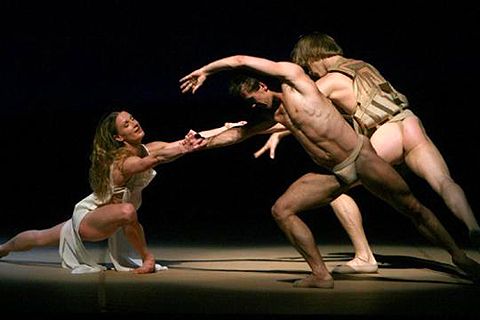
A modern production of Josephs Legende.
Source: CPO Records CD (my rip!)
Formats: FLAC(RAR), DDD Stereo, mp3(320)
File Sizes: 383 MB / 175 MB (FLAC version incl. covers & booklet)
The FLAC link has now expired. No more requests for this, please!
mp3 version – https://mega.nz/#!PZFAgYCZ!W6zrUEnO1n7UwJXiSputvMHliMXLR4Z8pNxuw5oyyVw
Enjoy! Don’t share! Buy the original! And please click on "Reputation" button if you downloaded this album! 🙂
So much stuff was indeed premiered by substantial talent all these centuries – in the day, and then fell into obscurity (I wouldn’t say disregard, because that implies intent) for no reason. As in every field of art or entertainment, so much of what one calls "fame" and "posterity" just comes down to pure luck.
Is there any way to download Vaughan Williams Symphony No. 2 conducted by Martin Yates?
Thanks in advance.
hoffmann24
OTOH, I have added an mp3 link for the wonderful orchestrations by Michel Decoust of short piano works by Erik Satie (No.599), which
were previously only available upon request:
Link received. Very much appreciated, as is the whole thread, and certainly the education and musical enlightenment unreservedly given via your efforts.
Again, many thanks.
Modern: Neo-Classical
Vagn Holmboe’s superb series of chamber concertos has been excellently documented on disc by
Denmark’s Dacapo label, but this disc is unusually interesting nonetheless, not least because it contains
two works not otherwise available. First however, it’s worth pointing out that all three concerted pieces
are “concertos for orchestra”, so having them together on a single disc is a good programming idea.
One newcomer to the current catalog is the Concerto giocundo e severo of 1977, a 10-minute single
movement scored for large orchestra that admirably lives up to its “cheerful and serious” title. In the first
quick episode, the lachrymose trombone part is particularly amusing. Also new to disc is the suite from the
abortive ballet project The Ill-Tempered Turk. It’s vintage Holmboe from the 1940s, a colorful
selection of dances that marries real musical substance to colorful but never tacky touches of “Orientalism”.
Both Chamber Concertos (8 & 10) reveal Holmboe’s formal ingenuity, the former being in two
movements of which the second is a marvelous theme and variations, while the latter has nine linked
sections exploiting different sections of the orchestra (along with thematic material evocative of the
composer’s studies of Romanian folk music).
Music Composed by Vagn Holmboe
Played by the Aalborg Symphony Orchestra
Conducted by Owain Arwel Hughes
"It is clear from the outset of No 8 (1945) that Owain Arwel Hughes takes a quite different
view of the music to Hannu Koivula on Dacapo. Where the Finn achieves a touch more impulse
the Welshman underscores the music’s internal cohesion; Hughes also plays down the Hindemithian
overtones. In the variations of the second, final movement – as well as in the Tenth’s nine
contrasting sections – it is Hughes whose account flows more succinctly (a virtue heard again
in the 1977 Concerto giocondo e severo), Koivula preferring to emphasise the contrasts. Both
ways work and there is little to choose between the performances; BIS’s sound, though, is
more resonant and spacious.
Holmboe devotees will be particularly keen on the other two works, both novelties. The Cheerful
and Severe Concerto is a single (12-minute) movement, though like the Tenth (1945-46) divided
into sections; here, though, they are compressed to form a compellingly fluent design in the
composer’s late, luminous style. More fascinating still is the suite, made (with some recomposition)
in 1969 from the music of the still-unperformed ballet Den Galsindede Tyrk (1942-44). The opening
‘Dance of the Executioner’ has echoes of the contemporaneous Fifth Symphony, while later
movements – for instance, the central ‘Dance of the Trees’ – point towards the Sixth and
Seventh (1947-50). But the music also seems eminently danceable, making its neglect all
the more astonishing. Heartily recommended."
Gramophone
Source: BIS Records CD (my rip!)
Formats: FLAC(RAR), DDD Stereo, mp3(320)
File Sizes: 272 MB / 156 MB (FLAC version incl. cover & booklet)
The FLAC link has now expired. No more requests for this, please!
mp3 version – https://mega.nz/#!7RdwEBKb!OG6EiQdv3l8hsHIQdk2NEBFhadX_yCJJisegFqNefSA
Enjoy! Don’t share! Buy the original! And please click on "Reputation" button if you downloaded this album! 🙂
The Roy Harris work certainly pulls no punches. It’s thought provoking and certainly demands attentive listening to. Great to be given the opportunity to hear it.
Many thanks indeed.
Modern: Tonal
William Schuman (1910-1992) composed his Symphony No.4 in 1941. Premiered a mere month and a half
after the Japanese attack on Pearl Harbor the new symphony’s essentially positive emotional climate sounded an
optimistic note during a very dark time. The opening movement begins quietly with solo English horn intoning a long-
spun melody over solo bass, and is eventually joined by the rest of the wind section. The bass line functions as a
Baroque-style ground bass, above which textures change kaleidoscopically, dynamics increase and counter-rhythms
contrast with the steadfast gait of the quarter-note-laden bass part. This introduction yields to a rhythmically alive
section marked Vigoroso con spirito. Echoes of Copland and Harris impart a distinctly American accent to the music.
Schuman’s mastery of polyphony is very much in evidence here. The movement ends with a grand brassfilled climax.
The second movement, marked Tenderly, simply, begins quietly in the violins and violas, underscored by a slow,
steady tread generated by pizzicato chords in the cellos. The mood is melancholy yet infused with mediating
warmth. A sense of intimacy is enhanced by the violins and violas playing con sordino (with mutes). Eventually
winds and brass enter, but the mood remains understated until a concluding section marked Fervente raises the
emotional temperature before the solo oboe passage marked dolce initiates the quiet closing moments.
The Finale begins with an animated dialogue between strings and winds. The music is energetic, forward and,
again, distinctly American. Sonorous brass enter, also strongly insistent, before yielding to renewed conversation,
this time between wailing winds and punching brass. Pizzicatos in the lower strings add to the impetus.
Overall the music conveys ???lan and optimism. Section by section more instruments have their say, and
while momentum is sustained contrasting densities of texture and a jaunty fugato provide contrast.
Timpani punctuate and further animate the music toward the end of the movement, echoed by
increasing power and dynamics in the rest of the orchestra.
The 1963 Orchestra Song is a deft arrangement for orchestra of an old Austrian folk-song. Short
and catchy, it is an affectionate take on a very rustic and simple tune in 3/4 time. At times brusque and
elsewhere unaffectedly sweet, the little ditty features a nice trumpet solo, colourful timbres from the
percussion, biting lower brass, and bow-struck strings. Not inappropriately, it conjures up sonic images
of calliope music. The Circus Overture dates from 1944. Originally bearing the title Side Show,
it was intended for use in a musical revue under the title “The Seven Lively Arts” conceived for the
Broadway stage; producer Billy Rose changed his mind, and the revue was dropped. Shortly thereafter,
Schuman rescored the light-hearted piece for full orchestra from its original pit-band orchestration.
The Overture begins with timpani and percussion leading all forces in an exuberant fanfare mode.
The whole piece suggests preparation for the arrival of the main event. A very energetic timpani part
plays off barking brasses before the winds enter. Typically for the composer, Schuman’s rhythmic
verve carries the music forward with relentless drive, even though the mood here is lightly festive.
Adding a sense of piquancy and whimsy, there is a colourful and droll Fellini-esque episode in 3/4 time.
In the spring of 1967, Schuman and his wife were in Rome, intending to visit the Ardeatine Caves,
the site of a horrific Nazi atrocity in 1944, when 335 innocent Italian men, women and children
were murdered. In notes Schuman provided for the original recording of the Ninth Symphony,
subtitled Le Fosse Ardeatine (The Ardeatine Caves), the composer wrote, “The mood of my
symphony, especially in its opening and closing sections, is directly related to emotions
engendered by this visit. But the middle section, too, with its various moods of fast music,
much of it far from somber, stems from the fantasies I had of the variety, promise and
aborted lives of the martyrs… The work does not attempt to depict the event realistically…"
Music Composed by William Schuman
Played by The Seattle Symphony
Conducted by Gerard Schwarz
"Schwarz’s Fourth competes with one from David Alan Miller and the Albany Symphony
on Albany TROY566. Miller, I think, leads a sharper, more direct first movement, closer
to what I think of as Schuman’s characteristic sound. However, he hurries the slow
movement, robbing it of its due weight, and his finale moves less coherently than
Schwarz’s. Overall, Schwarz’s broader reading wins out and, excepting the first
movement, yields nothing in clarity to Miller. Schwarz also wins out over Ormandy
in the Ninth, but then Ormandy and the Philadelphia were playing complex music
just after the ink had dried. I’m certain Schwarz learned something from Ormandy’s
pioneering account and the intervening years.
My single favorite track on the CD is the Circus Overture. Schwarz gives us the
musical essence of Schuman in a bravura reading. Obviously, he has connected
deeply with Schuman’s art. An outstanding release in Naxos’s American series."
Classical Net
Source: Naxos CD (my rip!)
Formats: FLAC(RAR), DDD Stereo, mp3(320)
File Sizes: 286 MB / 147 MB (FLAC version incl. covers & booklet)
The FLAC link has now expired. No more requests for this, please!
mp3 version – https://mega.nz/#!flJWBCwJ!7mJUyXISwjKw2hZ3MbIXjkSsYJ930r6f9xNfGX0SDzc
Enjoy! Don’t share! Buy the original! And please click on "Reputation" button if you downloaded this album! 🙂
Late Romantic
Jean Sibelius (1865–1957) was the most significant figure in the formation of national identity in
Finnish music, to the extent that since 2011 Finland has celebrated a Flag Day on 8 December (the composer’s
birthday), also known as the ‘Day of Finnish Music’. The seven symphonies and Violin Concerto lie at the
centre of Sibelius’ oeuvre, surrounded by tone poems often concerning a Finnish folklore narrative.
The Overture in A minor, JS144 was composed for a concert in March 1902, at which the Second
Symphony received its premi???re. Legend has it that the piece had been written in a hotel room during the
course of a single night. There certainly is little sense of relationship between the formality of the stern
pening and conclusion and the lively comical middle section. Sibelius’ output of incidental music for the
theatre began in 1898 with King Christian II (Op. 27), a historical drama written by his friend, the
Swedish dramatist Adolf Paul. Although the play was a great success at the time, it has now disappeared
from the repertory, with only the music surviving the test of time. The narrative centres around the love of
Christian II (whose rule extended over all three Scandinavian countries) for Dyveke, a Dutch girl from a
humble background. The playful Musette movement, which stands out as the most distinctive of the
pieces, was intended to be danced by this character in the play, accompanied by street musicians outside
her window. Paul said that Sibelius had wanted bagpipes and reeds for this dance, but that he scored it
for two clarinets and two bassoons, adding: “Extravagant, isn’t it? We have only two bassoon players in
the entire country, and one of them is consumptive.” This is testament to the limited instrumental
resources available to Sibelius at the time, and he himself conducted the small ensemble, situated
behind the scenes.
Sibelius’s incidental music for Kuolema (Death), JS113 was composed in 1903 to accompany a play
written by Arvid J???rnefelt, his brother-in-law (the composer having married Aino J???rnefelt in 1892). The play
is rich in symbolism, echoing the dreamscapes of Strinberg’s "A Dream Play" and Maeterlinck’s "Pell???as et
M???lisande" (for which Sibelius also composed incidental music two years later in 1905). The music for
Kuolema comprises six movements, the first of which, Tempo di valse lente, was intended for the
play’s opening scene. A woman, delirious and close to death, waltzes with an imaginary dancing partner,
who transforms into the figure of death, at which point she collapses, and her son wakes from his sleep
to find his mother’s lifeless body. It is scored for string orchestra, with the addition of a bass drum in the
fifth movement and ‘campanelli di chiesa’ (church bells) at the very end, evoking a suitably funereal mood.
Although Kuolema is not often performed in its entirety, several movements have enjoyed longevity
and widespread popularity, such as the first.
Music Composed by Jean Sibelius
Played by the Turku Philharmonic Orchestra
With Pia Pajala (soprano) & Waltteri Torikka (baritone)
Conducted by Leif Segerstam
"Leif Segerstam likes to let this music unfold slowly creating beautifully lyric lines in the process
and giving the music the sort of loving attention that it needs to be engaging. The music’s may
not always be at the top drawer, but there is still plenty here to enjoy. The Turku players also provide
committed performances and the singers work well here too. This is a great little disc of rarer
Sibelius that will fill in the esoteric gaps of those who love Sibelius’ music."
Cinemusical
Source: Naxos CD (my rip!)
Formats: FLAC(RAR), DDD Stereo, mp3(320)
File Sizes: 257 MB / 164 MB (FLAC version incl. covers, sung texts & booklet)
The FLAC link has now expired. No more requests for this, please!
mp3 version – https://mega.nz/#!LswkhLhR!xiYc_gHNDTipo-0F6p-s7dd-Lu5K12VLTYa-usjGI8k
/>
Enjoy! Don’t share! Buy the original! And please click on "Reputation" button if you downloaded this album! 🙂
OTOH, I have added an mp3 link for the wonderful orchestrations by Michel Decoust of short piano works by Erik Satie (No.599), which
were previously only available upon request:
Some time ago someone said that Satie???s Sports & Divertissements has an orchestral version(besides the original piano work) and it???s right. This nice CD includes this work.
THIS version wasn’t even released at that time, yet. 🙂
No.837
Modern: Americana
Peter Boyer is one of the most frequently performed American orchestral composers
of his generation, widely admired not least for his GRAMMY???-nominated Ellis Island: The
Dream of America (Naxos 8.559246). The composer writes, “The five works included on
this recording represent a cross-section of my orchestral music. Three Olympians reflects
my interest in mythology and history. Often I have received invitations to compose music
for celebratory concerts, and three of the works included here—Silver Fanfare,
Festivities and Celebration Overture—were created for such occasions.”
Symphony No.1 is a lyrical and rhythmically charged work, dedicated to the memory
of Leonard Bernstein.
The composer is best-known as an orchestrator in Hollywood, often for Michael Giacchino (Jurassic World).
Music Composed and Conducted by Peter Boyer
Played by the London Philharmonic Orchestra
"Peter Boyer’s love affair with American orchestras continues with his second Naxos recording,
dedicated to celebratory works composed for five American orchestras over a period of 15
years. Boyer, who claims more than 300 performances by more than 100 orchestras, writes
in a fluent, powerful style that fuses conservative American currents with Hollywood-ish size
and populist sentiment… Three Olympians… demonstrates the composer’s orchestration gifts
in a tour de force that evokes Apollo, Aphrodite, and, in a brilliant finale, Ares. [On Symphony
No. 1:] …the three-movement work is dominated by an 11-minute long third movement, an
absorbing, eventful Adagio with beautiful, written-out solo riffs… eloquent, spaciously
recorded performances."
Gramophone
Source: Naxos CD (my rip!)
Formats: FLAC(RAR), DDD Stereo, mp3(320)
File Sizes: 287 MB / 129 MB (FLAC version incl. covers & booklet)
The FLAC link has now expired. No more requests for this, please!
mp3 version – https://mega.nz/#!alglVIDQ!IiLWtb59SBUFbQd5r_c0VAqZ44GMxNY5hKFpzNjQChk
Enjoy! Don’t share! Buy the original! And please click on "Reputation" button if you downloaded this album! 🙂
tangotreats posted his rip a while ago, so I’m making the FLAC version an open link, too.
Modern: Tonal
Ondine’s successful Paul Hindemith (1895-1963) recordings with the NDR Sinfonieorchester
conducted by Christoph Eschenbach continue with another release featuring two major symphonic works by
the composer: Symphonie ‘Mathis der Maler’ and Symphonie in Es. The orchestra’s and Christoph
Eschenbach’s previous Hindemith release together with Midori won a Grammy Award in 2014.
The ‘Mathis der Maler’ Symphony is based on an opera that treats the life of the Renaissance painter
Mathias Gr???newald. Hindemith started to work on the symphony already prior to the completion of the opera.
The symphony was premiered with great success by the Berlin Philharmonic Orchestra under Wilhelm Furtw???ngler
on 12 March 1934. This performance was the last premiere of an orchestral work by Hindemith in Germany
before the National Socialist regime issued a general performance prohibition applying to his works in 1936.
Hindemith wrote his Symphonie in Es during his exile in the United States in 1940. The Symphony
is absolute music in the tradition of the four-movement symphony of Beethoven and the romantic period.
The work was premiered by Dimitri Mitropoulos who wrote to the composer: "The performance of your symphony
was for me one of the highest artistic moments of my career."
Music Composed by Paul Hindemith
Played by the NDR Sinfonieorchester
Conducted by Christoph Eschenbach
"Christoph Eschenbach made his conducting debut in 1972 with a performance of Bruckner’s
Symphony No. 3, soon followed by Verdi’s La Traviata at Darmstadt in 1978. In 1979 he was
named general music director of the Rheinland-Pfalz State Philharmonic (through 1981). He
was permanent guest conductor, then chief conductor, of the Z???rich Tonhalle Orchestra (1971-1985).
In 1988 he began his most significant and productive association to date as music director of
the Houston Symphony Orchestra, where he remained until 1999. Although the orchestra was
already established as one of America’s finer major symphonies, Eschenbach improved its
standards, heightened its international reputation, and broadened its repertory. He also
formed the Houston Symphony Chamber Players from its ranks. Eschenbach conducted the
Houston Symphony in recordings on the Koch International, Virgin, RCA Red Seal, Telarc,
and Carlton labels. These included standard fare such as some highly regarded Brahms and
Tchaikovsky recordings and all of the major Mozart wind concertos (with the orchestra’s own
soloists). He and the Houston Symphony also recorded Kurt Weill’s The Rise and Fall of the
City Mahagonny suite, Tobias Picker’s Las Encantadoras, and the violin concertos of John
Adams and Philip Glass.
From 1991 to 1998 he was co-artistic director of the Pacific Music Festival, along with
Michael Tilson Thomas. In 1994 Eschenbach was appointed music director of the Ravinia
Festival, the summer outdoor season of the Chicago Symphony Orchestra. In the 1998-
1999 season he became music director of the North German Radio Symphony Orchestra
of Hamburg, and, concurrently, artistic director of its Schleswig-Holstein Festival. In
2003, he became music director of the Philadelphia Orchestra, where he continued to
guest conduct from 2007-2010. Eschenbach spent the 2010-2011 season as music
director of the National Symphony Orchestra. Discs on which he conducts include Elgar
& Schnittke: Viola Concertos (2009), The Best of Lang Lang (2010), and Remembering
JFK – 50th Anniversary Concert (2011)."

Detail from an altarpiece by Matthias Gr???newald, the painter who
inspired Hindemith’s opera "Mathis der Maler".
Source: Ondine CD (my rip!)
Formats: FLAC(RAR), DDD Stereo, mp3(320)
File Sizes: 270 MB / 155 MB (FLAC version incl. cover & conductor’s bio)
The FLAC link has now expired. No more requests for this, please!
mp3 version – https://mega.nz/#!z8Ig3DzZ!PKDtXQY_ZWINvGvHXlMBP3SJid9H7GdDzD0kdx1ilRw
Enjoy! Don’t share! Buy the original! And please click on "Reputation" button if you downloaded this album! 🙂
Late Romantic
Bax’s Symphony number nought at last! The piano score of Arnold Bax’s Symphony
in F of 1907 was completed by its composer but never orchestrated, and has
long been one of the great “might-have-beens” of the British symphonic repertoire,
along with Elgar’s Third Symphony and E. J. Moeran’s Second. Unlike Elgar and Moeran,
Bax actually completed his symphony, and now Martin Yates has set it into
full score, managing to catch the elusive, idiomatic sound of Bax’s orchestra in a
convincing way we never expected to hear. The glorious second movement in particular,
on a similar scale to his many later tone poems, is revealed as a striking and
poetic creation in which Bax finds his voice. All lovers of English music will
want to get to grips with this epic, romantic score.
Music Composed by Arnold Bax
Orchestrations by Martin Yates
Played by the Royal Scottish National Orchestra
Conducted by Martin Yates
"It is often the case that the first symphonic essay of any aspiring composer tends to be long.
Nevertheless, Bax’s Symphony in F must be one of the most extraordinarily ambitious initial
canvases for any composer at the beginning of his career. At just over 78 minutes, it reflects
the extended projections of Mahler and Rachmaninov, some of which Bax certainly encountered
on the European continent.
Written during a love affair in 1907, and time spent in Dresden, Bax’s Symphony was left
complete in short score (partly at University College, Cork, where I saw it as a young lecturer,
and partly in private possession) but has been very sympathetically orchestrated here by Martin
Yates. Although as yet stylistically inchoate (one can, as Lewis Foreman points out in his excellent
booklet-notes, detect strong elements of Glazunov and Strauss), the work is a fascinating
m???lange of rich thematic material and developmental processes in which Bax’s individual voice
is often discernible. A dramatic first movement, almost balletic in demeanour, is a wash of
orchestral colour. The second movement, to me much more Baxian in gesture (and somewhat
more redolent of his Celtic Twilight obsession), is a stronger lyrical essay, while the demonic
third, inspired by Hofmannsthal’s Der Tor und der Tod (‘The Fool and Death’), is distinctly
Straussian in its Till Eulenspiegel eccentricities. The last movement, by far the longest at
25 minutes, is an elongated fantasia where the thematic ideas are treated cyclically.
A demanding work, it is performed with energy and empathy by Yates and the Royal
Scottish National Orchestra. For any lover of early-20th-century British symphonic
music, this is a must."
Gramophone
Source: Dutton Epoch CD (my rip!)
Formats: FLAC(RAR), DDD Stereo, mp3(320)
File Sizes: 360 MB / 179 MB (FLAC version incl. covers & booklet)
The FLAC link has now expired. No more requests for this, please!
mp3 version – https://mega.nz/#!XwRSyQBD!T4L4doMCk0ZDGWXEfF21QVFK_mtlTGsQjVF2fA3cOrU
Enjoy! Don’t share! Buy the original! And please click on "Reputation" button if you downloaded this album! 🙂
Modern: Tonal
Ondine’s successful Paul Hindemith (1895-1963) recordings with the NDR Sinfonieorchester
conducted by Christoph Eschenbach continue with another release featuring two major symphonic works by
the composer: Symphonie ???Mathis der Maler’ and Symphonie in Es. The orchestra’s and Christoph
Eschenbach’s previous Hindemith release together with Midori won a Grammy Award in 2014.
The ???Mathis der Maler’ Symphony is based on an opera that treats the life of the Renaissance painter
Mathias Gr???newald. Hindemith started to work on the symphony already prior to the completion of the opera.
The symphony was premiered with great success by the Berlin Philharmonic Orchestra under Wilhelm Furtw???ngler
on 12 March 1934. This performance was the last premiere of an orchestral work by Hindemith in Germany
before the National Socialist regime issued a general performance prohibition applying to his works in 1936.
Hindemith wrote his Symphonie in Es during his exile in the United States in 1940. The Symphony
is absolute music in the tradition of the four-movement symphony of Beethoven and the romantic period.
The work was premiered by Dimitri Mitropoulos who wrote to the composer: "The performance of your symphony
was for me one of the highest artistic moments of my career."
Music Composed by Paul Hindemith
Played by the NDR Sinfonieorchester
Conducted by Christoph Eschenbach
"Christoph Eschenbach made his conducting debut in 1972 with a performance of Bruckner’s
Symphony No. 3, soon followed by Verdi’s La Traviata at Darmstadt in 1978. In 1979 he was
named general music director of the Rheinland-Pfalz State Philharmonic (through 1981). He
was permanent guest conductor, then chief conductor, of the Z???rich Tonhalle Orchestra (1971-1985).
In 1988 he began his most significant and productive association to date as music director of
the Houston Symphony Orchestra, where he remained until 1999. Although the orchestra was
already established as one of America’s finer major symphonies, Eschenbach improved its
standards, heightened its international reputation, and broadened its repertory. He also
formed the Houston Symphony Chamber Players from its ranks. Eschenbach conducted the
Houston Symphony in recordings on the Koch International, Virgin, RCA Red Seal, Telarc,
and Carlton labels. These included standard fare such as some highly regarded Brahms and
Tchaikovsky recordings and all of the major Mozart wind concertos (with the orchestra’s own
soloists). He and the Houston Symphony also recorded Kurt Weill’s The Rise and Fall of the
City Mahagonny suite, Tobias Picker’s Las Encantadoras, and the violin concertos of John
Adams and Philip Glass.
From 1991 to 1998 he was co-artistic director of the Pacific Music Festival, along with
Michael Tilson Thomas. In 1994 Eschenbach was appointed music director of the Ravinia
Festival, the summer outdoor season of the Chicago Symphony Orchestra. In the 1998-
1999 season he became music director of the North German Radio Symphony Orchestra
of Hamburg, and, concurrently, artistic director of its Schleswig-Holstein Festival. In
2003, he became music director of the Philadelphia Orchestra, where he continued to
guest conduct from 2007-2010. Eschenbach spent the 2010-2011 season as music
director of the National Symphony Orchestra. Discs on which he conducts include Elgar
& Schnittke: Viola Concertos (2009), The Best of Lang Lang (2010), and Remembering
JFK – 50th Anniversary Concert (2011)."

Detail from an altarpiece by Matthias Gr???newald, the painter who
inspired Hindemith’s opera "Mathis der Maler".
Source: Ondine CD (my rip!)
Formats: FLAC(RAR), DDD Stereo, mp3(320)
File Sizes: 270 MB / 155 MB (FLAC version incl. cover & conductor’s bio)
Download Link – [Click on the reputation button, leave a comment (or not) and PM me to get the FLAC link]
mp3 version – https://mega.nz/#!z8Ig3DzZ!PKDtXQY_ZWINvGvHXlMBP3SJid9H7GdDzD0kdx1ilRw
Enjoy! Don’t share! Buy the original! And please click on "Reputation" button if you downloaded this album! 🙂
What a fantastic interpretation, antiphonal string section!, one of the best recordings of the symphony in es i know. Big thanks wimpel69.
Pre-1945: Tonal
There is almost no information to be found on the web on the Soviet composer Yuri Vladimirovich Kochurov
except that he was born in Saratov in 1907 and died early, in 1952, in Leningrad. He composed music
for a number of movies that appear to be unknown outside the former Soviet Union, including "Young
Pushkin", "Professor Mamlock" and "Treasure of the Wrecked Vessel". The writer of the liner-notes – seems
to assume we will know his “most popular opuses” namely song cycles of texts by Pushkin, Lermontov
and Tyutchev and a Petrarch Sonnet for voice and organ. Only, we don’t. So what do we have here:
The commissioning of incidental music for a 1940 production of Shakespeare’s Macbeth led to a
score Kochurov developed over the ensuing eight years as his Macbeth Symphony which was
premiered by Kurt Sanderling and the Leningrad Philharmonic Orchestra in December 1948. You should
know several things about this work straightaway; it is not a symphony even in the Domestica or
Alpine sense but it is remarkably Straussian and as such an extended tone-poem. For sure there
are thematic/character motifs that lend it a symphonic unity but the six linked but defined sections give
it much more of a feel of say Also Sprach Zarathustra. There is nothing particularly subtle in
the musical characterisation but then it could be argued that the big broad strokes of the play;
Macbeth, Lady Macbeth, killing King Duncan and the final death and destruction of Macbeth and
his ambitions do not require the subtlest of nuance.
The Suvorov Overture refers to Alexander Suvorov who was one of the great Russian military
commanders of the 18th Century. Apart from his skills as a soldier it can be imagined that his ‘common
touch’ was something much celebrated in the Soviet era by word if not in deed. In this work Kochurov
does not try to be specifically programmatic instead he uses the title to allow him to write what I can
only describe as a "Classical Comedy Overture" in the same way that Prokofiev’s Symphony No.1 is
‘Classical’.
With the Solemn March Kochurov wears another hat – this time it is the ceremonial/celebrational
march of Tchaikovsky. This is far more quirky than similar "propaganda" works of the era, and is more
jaunty than solemn. The fun is in the counter-melodies and how he orchestrates them. In the Heroic
Aria, the mezzo-soprano has a fairly dreadful text to sing: "Leningrad troops are marching to do
battle against evil invaders" is one of the more deathless couplets. But again Kochurov seems to have
found a way of setting it that has the ring of sincerity. It should be no surprise that this occupies more
of a predictable sound-world but it manages to feel more like an operatic aria than propaganda piece.
Music Composed by Yuri Kochurov
Played by the St. Petersburg State Academic Symphony Orchestra
With Olesya Petrova (mezzo-soprano)
Conducted by Alexander Titov
"This CD encapsulates exactly what I was hoping to find in more of the others in this series;
interesting repertoire by forgotten composers. Conversely the music here does not reflect
the influence of the War as clearly as others but for those interested in unusual music by a
maverick albeit a conservative one it is well worth investigating. If the quality of performance
and recording were better I would give this an unqualified welcome but as it is this is still
an interesting byway worth travelling."
Musicweb
Source: Northern Flowers CD (my rip!)
Formats: FLAC(RAR), DDD Stereo, mp3(320)
File Sizes: 262 MB / 124 MB (FLAC version incl. cover)
The FLAC link has now expired. No more requests for this, please!
mp3 version – https://mega.nz/#!ehAR1ZRA!x9MZ4pu0ZU7ARxoeFMy3JtN8O8KLAUEwM7uMBFvW-c4
Enjoy! Don’t share! Buy the original! And please click on "Reputation" button if you downloaded this album! 🙂
Modern: Symphonic Jazz
John Alden Carpenter (1876-1951) was a descendant of the very John Alden Carpenter who
arrived on the Mayflower. He was one of the earliest to incorporate jazz and Latin/Spanish-
flavored "popular" music into his scores. This Dutton release features American pianist
Michael Chertock and conductor Keith Lockhart, who bring verve and panache to the
popular Concertino for piano and orchestra and the world premi???re recording of Carpenter’s
later Patterns for piano and orchestra. Also presented here is the delightful jazz-ballet
Krazy Kat and Carpenter’s Leopold Stokowski commission, the beautiful Carmel Concerto,
Carpenter’s final orchestral work.
Music Composed by John Alden Carpenter
Played by the BBC Concert Orchestra
With Michael Chertock (piano)
Conducted by Keith Lockhart
"Krazy Kat is the eponymous character of a cartoon strip that first appeared in the New York Evening
Journal in 1913. There aren’t too many classical works that are based on cartoon strips; the only other
one I can think of is Ellen Zwilich’s Peanuts. Carpenter’s music was written for a pantomime ballet,
choreographed by Adolph Bolm. It predates Rhapsody in Blue by several years, so the use of a
saxophone and wa-wa mutes on the brass must have provoked consternation for some.
The sound-world of the Piano Concertino is something of a mix of the Romanticism of
Rachmaninov and the jazz of Gershwin, all blended with Latin sensibilities. The notes don’t
explain why it is called a concertino, given that at 25 minutes plus, it certainly isn’t a miniature,
but it is rather light in atmosphere, so that may be the reason. The rather odd mix results in
a work that is enjoyable at any moment that you choose to drop in on it, but doesn’t really
hang together as a whole. The slow movement is dreamily pretty, but meandering.
The Carmel Concerto, Carpenter’s final symphonic work, reworks material from an earlier violin
concerto; no solo part remains. It is a tribute to the California seaside town of that name,
where Carpenter had spent some time. It has no jazz influence, unlike its disc-mates. It is
my pick of the works on this CD, by turns playful, graceful, and wistful, adding some dramatic
elements towards the close. For this to be its first recording emphasises how there remain
plenty of fine works still waiting their turn.
Patterns is not a conventional piano concerto, or indeed concertino, but has a substantial
and difficult part for the soloist. Despite what I said about Carpenter’s symphonies, he can’t be
accused of not paying attention to the changing musical environment. This work uses a
tone-row as the recurring theme for the work, but clothes it in harmonies that make the
result more approachable.
The performances are uniformly excellent, and the notes by pianist Michael Chertock
comprehensive and informative."
Musicweb
Source: Dutton Epoch CD (my rip!)
Formats: FLAC(RAR), DDD Stereo, mp3(320)
File Sizes: 325 MB / 163 MB (FLAC version incl. covers & booklet)
The FLAC link has now expired. No more requests for this, please!
Please add to my reputation if you download and like this album!
Enjoy! Don’t share! Buy the original! And please click on "Reputation" button if you downloaded this album! 🙂
Modern: Tonal
Among America’s most admired, awarded and frequently performed composers, Ellen Taafe Zwilich,
who celebrated her 70th birthday in 2009, remains young at heart. Performed here by virtuoso
pianist Jeffrey Biegel for whom it was written, Millennium Fantasy is based on a
folksong that Zwilich’s grandmother sang to her as a child. Images drew its inspiration from a
number of paintings held at the National Museum of Women in the Arts in Washington, D.C., including
the Alice Bailly self-portrait reproduced on the cover of this disc. Zwilich, herself featured
in Charles M. Schulz’s famous Peanuts??? comic strip, returned the favor with a delightful
series of musical portraits of Schroeder, Linus, Snoopy, Charlie Brown, Lucy, Peppermint Patty
and Marcie.
Music Composed by Ellen Taaffe Zwilich
Played by the Florida State University Symphony Orchestra
With Jeffrey Biegel (piano) & Read Gainsford (piano)
And Heidi Louise Williams (piano)
Conducted by Alexander Jim???nez
"When Ellen Taaffe Zwilich’s music first appeared on disc she had a couple of things going for
her: first, she was a woman, which was very politically correct and afforded her more attention
than she might otherwise have aroused at the time; and second, her last name begins with the
letters “Zw”, which makes her discs easy to find in large collections since they fall near the end
of the alphabet. Neither of these facts does her justice, obviously, and now that she’s exactly
as old as my mother it’s a pleasure to report that she has maintained and even enhanced her
reputation as a major American composer for no other reason than that she’s a major American
composer.
The earliest work here, Images for two pianos and orchestra (1986), is a moody suite of five
movements inspired by paintings created by, you guessed it, female artists. Next up is Peanuts
Gallery (as in the comic strip), a delicious piece for piano and orchestra somewhat in the
tradition of Carnival of the Animals. Schroeder leads off with a tribute to Beethoven, followed
by Linus asleep, Snoopy dancing the samba, Charlie Brown’s lament, Lucy “freaking out”, and
a final parade similar to that in Peter and the Wolf, led by Peppermint Patty and Marcie.
Unfortunately Pigpen doesn’t participate, and neither does Woodstock, but the music is
wholly delightful, all the more so for being so sincere and not a bit cartoonish.
Millennium Fantasy is a two-movement piano concerto based on a lovely folksong that Zwilich
first heard from her grandmother. It’s a terrific piece, beautifully constructed, and sounding
at times like modern-day Gershwin. In the second movement, dance rhythms keep on
breaking out, and if you listen to all three pieces in order you begin to realize that Zwilich
really does have her own distinctive voice. Her handling of certain instruments–suspended
cymbals, for example–and her use of sustained notes in the violins as a background for
music in quicker rhythms, features prominently in all three works. Just as noticeably, she
handles form in a smart and shapely manner, pacing each movement and grouping them
together to create unfailingly satisfying larger structures.
The performances here sound uniformly excellent. Jeffrey Biegel, for whom the Fantasy
was written, plays both that work and the solo part in Peanuts Gallery with aptly proprietary
confidence. Read Gainsford and Heidi Louise Williams team up most effectively in Images,
and the Florida State University Symphony Orchestra under Alexander Jim???nez leaves
absolutely nothing to be desired. The sonics are also excellent: bright, clean, and well-
balanced. A splendid disc, then, in all respects, and a mandatory acquisition if you’re
interested in good contemporary music."
David Hurwitz, Classics Today http://i1164.photobucket.com/albums/q574/taliskerstorm/p10_zpshsmtdoti.gif
Source: Naxos CD (my rip!)
Formats: FLAC(RAR), DDD Stereo, mp3(320)
File Sizes: 231 MB / 121 MB (FLAC version incl. covers & booklet)
The FLAC link has now expired. No more requests for this, please!
mp3 version – https://mega.nz/#!atJEmTRQ!VkGzJjeyxwefveEbvBV0AKpt5G71zjxzTYlNBhMATAg
Enjoy! Don’t share! Buy the original! And please click on "Reputation" button if you downloaded this album! 🙂
Late Romantic
The great twentieth-century Russian poet, Mikhail Alexeevich Kuzmin, was for much of
his early life also passionately devoted to composition. Masterpieces of the vocal miniature,
his Sacred Songs for voice and orchestra are settings of his own words based on studies
of ancient Russian music. His incidental music for Masquerade is notable for a heartfelt
"Romance" and a closing chorus which draws upon traditional Russian church music. The Society
of Honoured Bell Ringers displays Mahlerian and Mozartian influences whilst greater harmonic
complexity can be savoured in Kuzmin’s edgier music for Der deutsche Hinkemann.
Music Composed by Mikhail Alexeevich Kuzmin
Played by the Karelia State Philharmonic Symphony Orchestra (Petrozavodsk)
With Mila Shkirtil (mezzo-soprano)
And the Petrozavodsk State University Male Choir
Conducted by Yuri Serov
"History will recall that Mikhail Alexeevich Kuzmin was one of the great Russian poets of the
twentieth century, and it will ignore his copious output as a composer. Not that his musical
education lacked anything, his two composition mentors being Liadov and Rimsky-Korsakov.
Yet it was to be his literary skills that took over, and he was to look towards music as more
of a hobby than a career. Working in either side of this dual lifestyle, he was essentially a
miniaturist, the present disc containing twenty-two tracks. He seemed particularly happy in
the field of incidental music for three plays, The Society of Honoured Bell Ringers, Masquerade
and Hinkemann the German. Here he followed in the footsteps of his tutors with colourful
cameos to picture scenes on stage, though his harmonic language was very personal and
interesting. Maybe an unusual suggestion, but I would advise you to start with the disc’s
final work, Hinkemann the German. Composed in 1923, it offers an entry point to Kuzmin’s
offshoot of conventional tonality, much of it composed in dance form. With a very smoochy
Tango and a quirky March, it is music in the same populist mode that Shostakovich was to
adopt a decade later. The one work that is here totally out of context comes with the
three Sacred Songs. Pieces that have their roots firmly in the world of Mussorgsky and
Borodin. They are not sacred, in the sense that they belong to the church, as they have
a sensual beauty of the secular world, the mezzo, Mila Shkirtil, having an ideal tonal
warmth for the characterisation of each song. This year the Karelia State Philharmonic—
from Northwest Russia—celebrates its 60th birthday, and is here directed by the much
experienced Russian conductor, Yuri Serov. We are in the world of Premiere Recordings,
and you will discover interesting music."
David’s Review Corner
Source: Naxos CD (my rip!)
Formats: FLAC(RAR), DDD Stereo, mp3(320)
File Sizes: 265 MB / 158 MB (FLAC version incl. covers & booklet & sung texts)
The FLAC link has now expired. No more requests for this, please!
mp3 version – https://mega.nz/#!GsRkGTxA!xTdnkeMvvJ8xqOQLoSvyJ2cgM_-rnGyVYbUNKIxiOHU
/>
Enjoy! Don’t share! Buy the original! And please click on "Reputation" button if you downloaded this album! 🙂
Excellent share. Appreciated.
Excellent share. Appreciated.
Me too…
Modern: Tonal
With three major works by Malcolm Arnold from the mid-1970s, Dutton Epoch surveys
his music written in Ireland. The focus of the programme is Arnold’s Seventh Symphony,
dissonant and exhilarating by turns in the first movement and ending with Irish elements crowned
by a riotous Irish reel complete with the pounding rhythm of a marching drum. The distinctive sound
of a cowbell in the outer movements characterizes the music in memory. Peter Donohoe is the
commanding pianist in the Fantasy on a theme of John Field op.116. Arnold called it "a piano
concerto in one movement" in a piece in which John Field’s radiant seventh Nocturne for piano is
subjected to a variety of treatments from wild march and circus music to lush romantic panoply.
The London Philharmonic Orchestra commissioned that vigorous display piece, the Philharmonic
Concerto op.120, for an American tour. It is in fact a sort of Concerto for Orchestra,
and the Royal Scottish National Orchestra rise to its colourful demands with typical
verve. The composer promised it would offer "the glorious sound of a symphony orchestra,"
and it certainly does in the RSNO’s brilliant playing.
Music Composed by Malcolm Arnold
Played by the Royal Scottish National Orchestra
With Peter Donohoe (piano)
Conducted by Martin Yates
"These three works by Malcolm Arnold all date from the mid-1970s, when, as Piers Burton-Page says
in his informative note, the composer was plagued by mental illness. Symphony No. 7 is certainly
disturbed, and disturbing. Its first movement sets off in a bout of hysteria and exposes raw nerves
all the way through; its slow movement erupts at one point into a nightmarish crescendo; and its
finale tries but fails to find refuge in Irish dance tunes. Though the Seventh has prompted comparisons
with Mahler and Shostakovich, no work that I know of by either composer gives such a vivid sense
of a desperate struggle for sanity. The mood swings are enhanced by Martin Yates’s fast tempos
(about seven minutes faster than Andrew Penny’s Naxos performance), to which the RSNO responds
with collective and individual brilliance.
This orchestral virtuosity also lights up the Philharmonic Concerto, a display piece which veers
between Walton-like swagger, good singing tunes and interjections of crude banality. The Fantasy
on a theme of John Field, in which Peter Donohoe is the excellent soloist, subjects one of Field’s
pre-Chopin piano Nocturnes to a barrage of competing ideas and disruptive treatment, including
a climactic transformation of its melody into a parody of Rachmaninov. Field’s original, obsessive
Nocturne throws illuminating light on the Fantasy."
BBC Music Magazine (*****/*****)
Source: Dutton Epoch CD (my rip!)
Formats: FLAC(RAR), DDD Stereo, mp3(320)
File Sizes: 317 MB / 167 MB (FLAC version incl. artwork & booklet)
The FLAC link has now expired. No more requests for this, please!
Please add to my reputation if you download and like this album!
Enjoy! Don’t share! Buy the original! And please click on "Reputation" button if you downloaded this album! 🙂
Modern: Neo-Romantic
The distinguished American composer Thomas Pasatieri (*1945) is well known for his operas,
having composed 22, as well as for his hundreds of songs and other vocal works. In fact,
his first symphony, written at age 63 came about because of his association with the
University of Kentucky and their production of his opera, The Hotel Casablanca.
His Symphony No.2 was written for conductor John Nardolillo and the University
of Kentucky Symphony Orchestra as well, while Symphony No.3 was commissioned and
premiered by the Northwest Sinfonietta. These are world premiere recordings of these works.
Pasatieri is best known to film music lovers as one of Hollywood’s most experienced
orchestrators. He currently has 67 films to his credit, including "The Pelican Brief",
"Dirty Rotten Scoundrels", "The Shawshank Redemption", "WALL-E" and "Wreck-It Ralph".
Music Composed by Thomas Pasatieri
Played by the University of Kentucky Symphony Orchestra
With Catherine Clarke Nardolillo (soprano)
And the Lexington Singers Children’s Choir
And the Danville Children’s Choir
Conducted by John Nardolillo
"I love the sound of the orchestra," says Pasatieri, a former artistic director of the Atlanta Opera
whose credits include orchestrations for dozens of films such as American Beauty and The Shawshank
Redemption. "I love the players and their personalities, and who they are as people. I was at their
Carnegie Hall concert, the one they do each year with Arlo Guthrie, and they played so beautifully,
with such virtuosity." That brings us back to the orchestra’s big collaborations and events, which don’t
surprise Pasatieri at all. This time last year, the UK Symphony was preparing to play as the orchestra
for the opening ceremonies of the Alltech FEI World Equestrian Games, where it supported artists
including country star Wynonna Judd, Irish tenor Ronan Tynan, opera diva Denyce Graves and
members of the Lincoln Center Jazz Orchestra. In the past several years, the ensemble has
performed with stars such as violinists Sarah Chang and Gil Shaham, and later this year the UK
Symphony has concerts scheduled with the eclectic orchestra Pink Martini on Dec. 10 and violinist
Natasha Paremski on Feb. 11, in addition to the Boston Pops.
"They’re so good, and he’s so good," Pasatieri says of the orchestra and Nardolillo. "It’s an incredible
opportunity for them to come here and be in this orchestra with all the experiences they get to
have." As a music education experience, presenting the world premiere of a new work is a huge
opportunity, Nardolillo says, because of the chance to interpret the score with no preconceptions
and the chance to interact with the composer."
Lexington Herald-Leader
Source: Albany Records CD (my rip!)
Formats: FLAC(RAR), DDD Stereo, mp3(320)
File Sizes: 354 MB / 181 MB (FLAC version incl. artwork & booklet)
The FLAC link has now expired. No more requests for this, please!
Please add to my reputation if you download and like this album!
Enjoy! Don’t share! Buy the original! And please click on "Reputation" button if you downloaded this album! 🙂
Modern: Tonal
The Albany Symphony conducted by David Alan Miller offers a recording of major
works by the illustrious American composer John Harbison. The Great Gatsby Suite comes
from Harbison’s opera and concentrates on the instrumental music. Darkbloom: Overture for an
Imagined Opera comes from material for an opera project that Harbison decided not to continue.
The newest work on the recording, Closer to My Own Life, in which the acclaimed soprano
Mary Elizabeth Mackenzie joins Maestro Miller and the Albany Symphony, uses texts extracted
from stories written by Alice Munroe, Harbison’s favourite prose writer.
Music Composed by John Harbison
Played by the Albany Symphony Orchestra
With Mary Elizabeth Mackenzie (soprano)
Conducted by David Alan Miller
"John Harris Harbison is among the most prominent and prolific of American composers;
his highly varied and interesting output has earned him the moniker, "the great master of
ambiguity." His principal works include three string quartets, three symphonies, the cantata
The Flight Into Egypt (Pulitzer Prize, 1987), and three operas, including The Great Gatsby
(commissioned by The Metropolitan Opera — premiered there, 1999).
Harbison was born in Orange, NJ, on December 20, 1938, and grew up in Princeton. While a
teenager he received musical guidance from Roger Sessions, one of his formative influences,
while also developing considerable skills as a jazz pianist. Other of Harbison’s teachers
include Walter Piston at Harvard, Boris Blacher at the Berlin Hochschule f???r Musik, and
Earl Kim at Princeton. As influential as any teacher was Harbison’s marriage to violinist
Rose Mary Pederson — the inspiration for many of his violin pieces. Since 1969, he has
been professor of music at the Massachusetts Institute of Technology, necessitating his
becoming a "summer composer." More than 30 of his compositions have been recorded
on the Nonesuch, Northeastern, Harmonia Mundi, New World, Decca, Koch, Centaur,
Archetype, and CRI labels. His music is published exclusively by Associated Music Publishers.
Exceptional economy and expressive range mark Harbison’s music. His works embrace
elements of jazz as well as the early and late Baroque styles of Heinrich Sch???tz and J. S.
Bach. At times, the harmonic palette brings to mind the sound of Prokofiev or the rigorous
serialism of 1950s Stravinsky. He is also a practiced writer on the art and craft of
composition, and was recognized in his student years as an outstanding poet, later
writing the libretto for his The Great Gatsby.
Harbison’s music first garnered national attention with the Boston Symphony Orchestra’s
1976 premiere of Diotima, a commission by the Koussevitzky Foundation. This, his first
major work for orchestra, showed him an adept symphonic composer — a talent that he
then applied to a string of concerted works, such as his Piano Concerto (1978) (recipient
of the 1980 Kennedy Center Friedheim Award), and the Violin Concerto (1978-1980, rev.
1987), written for and premiered by Rose Mary Harbison. Other concertos came later,
including one for viola (1989), oboe (1991), cello (1993), and flute (1993).
Occasionally, as in The Most Often Used Chords (Gli accordi pi??? usati) of 1993,
Harbison enjoys putting compositional restrictions on himself to ignite his imagination.
A great percentage of Harbison’s works are for voice — either solo, small ensemble,
or large chorus; most notable among these are his Mirabai Songs (for soprano and
percussion ensemble) and his operas, which (besides the aforementioned Gatsby)
are: Full Moon In March (1977) and Winter’s Tale (1974, rev. 1991).
Harbison has worked extensively as a conductor, particularly with the Cantata Singers
(1969-1973) and the new-music group Collage (established in 1984). He is a champion
of twentieth century music, especially composers he feels have been neglected,
such as Luigi Dallapiccola."
Source: Albany Records CD (my rip!)
Formats: FLAC(RAR), DDD Stereo, mp3(320)
File Sizes: 232 MB / 118 MB (FLAC version incl. artwork & booklet)
The FLAC link has now expired. No more requests for this, please!
Add to my reputation if you download and like this album!
Enjoy! Don’t share! Buy the original! And please click on "Reputation" button if you downloaded this album! 🙂
Modern: Tonal/Minimalism
Four new works by the compelling American contemporary composer Michael Torke include the
Concerto for Orchestra performed by the Royal Liverpool Philharmonic and conducted by
Vasily Petrenko. Bliss, whose rhythmic syncopations are explored and developed over its
11-1/2 minutes to scintillating effect by the University of Kansas Wind Ensemble. Oracle was
composed and designed to be a concert opener and its tonal textures proclaim its raison d’etre and is
performed by the Quad City Symphony Orchestra, and finally Iphigenia performed by the
Camerata NY and written for the stage brings out the Baroque tendencies and influences in Torke’s
compositions. Ecstatic Records is the composer’s own label.
Music Composed by Michael Torke
Played by the Royal Liverpool Philharmonic and the Quad City Symphony
With the Kansas Wind Ensemble & the Camerata New York
Conducted by Vasily Petrenko & Mark Russell Smith
And Paul W. Popiel & Richard Owen
"American composer Michael Torke is a synesthete who perceives the key of E major
as green and D major as blue. It followed that his new Concerto for Orchestra should
be marked by some astonishing splashes of colour, even if the thematic palette was
somewhat restricted. The 20 minute, seven-movement piece was structured around a
single, four-note motif, initially announced by the brass and passed round the ensemble
in various permutations. Torke has a distinctly American orchestral accent: transparent,
Philip Glass-like textures tussled with the infectious shimmy of Bernstein in mambo mode;
while Walt Disney was the presiding influence of a syrupy largo in which the theme broke
down and seemingly attempted to reconfigure itself as When You Wish Upon a Star."
The Guardian
Source: Ecstatic Records CD (my rip!)
Formats: FLAC(RAR), DDD Stereo, mp3(320)
File Sizes: 299 MB / 158 MB (FLAC version incl. artwork & booklet)
The FLAC link has now expired. No more requests for this, please!
Add to my reputation if you download and like this album!
Enjoy! Don’t share! Buy the original! And please click on "Reputation" button if you downloaded this album! 🙂
Modern: Light Music
Bill Worland (1921-2011) was born in London and was trained as a classical musician, but
soon after leaving school started playing with light orchestras such as Cecil Barker’s band, a
regular feature of the Summer Season at the Broadstairs Pavilion throughout the 1950s and 60s,
and the East Kent Light Orchestra. He moved to Kent in the 1960s, and composed many works for
the BBC, but was aghast when in 1967 they cut the whole Light Programme (the forerunner of
Radio 2) and several individual programmes focusing on light music. He continued campaigning,
together with the Light Music Society, on behalf of this genre’s many fans, and now at last
it seems to be back in favour.
Music Composed by Bill Worland
Played by the RT??? Concert Orchestra, Dublin
Conducted by Gavin Sutherland
"In reviewing Bill Worland’s memoirs ‘Fumble Four Bars In’ (British Music Society News 80 page 246
) I said I would love to hear some of his music. Now, courtesy of Marco Polo and the highly accomplished
RTE Orchestra, brilliantly directed by the young Gavin Sutherland, I have my wish. Worland, born in 1921,
was a pianist in dance bands and light orchestras either side of the Second War and turned his hand to
composition at a time when British light music was going into something of a decline in public appreciation.
He is not easily discouraged, however, and has continued composing, achieving broadcast and some
live performances and now a CD to himself in Marco Polo’s admirable series. And an attractive one it is,
too, and quite varied. Worland, like not a few light music composers, derives inspiration from Latin
American and Spanish rhythms, as we can hear from the Tres Se???oritas suite and the movements Latin
Lovers, Pepita, Sombrero, Happy Hacienda and Bossa Romantica, all in this disc, all tuneful and
entertaining. I also enjoyed In the Shadow of Vesuvius, a suite, or sequence in several sections, which
conveys the colour of Italy nicely. But Worland can portray British scenes and people too; Scottish
Power, another suite/sequence, Dreaming Spires, Leeds Castle, To Eleanor (wife of Edward I) and the
moving Rhapsody Tristesse, dedicated to his one time piano teacher. As he says in his insert notes
the lively Shopping Spree (track 1) was reckoned to resemble Robert Farnon. Indeed it does; Worland’s
piece of train music is Farnonish too – hardly surprising in view of Farnon’s long-held, high status in
light music this side of the Atlantic. Some of the music, like Millennium Celebration March and
Scottish Power, have been recently composed, for the recording in fact. Bill Worland will be a
new experience for many of you, but hopefully an enjoyable one. I hope there is more to
come from his pen."
Musicweb
Source: Marco Polo CD (my rip!)
Formats: FLAC(RAR), DDD Stereo, mp3(320)
File Sizes: 372 MB / 198 MB (FLAC version incl. covers & booklet)
The FLAC link has now expired. No more requests for this, please!
mp3 version – https://mega.nz/#!vhB1gaBS!qK-BUwuPXDcj633ADNlCp9Nc61Qdli4iMMHRCXBACJ8
/>
Enjoy! Don’t share! Buy the original! And please click on "Reputation" button if you downloaded this album! 🙂
Late Romantic
After Carl Nielsen, Louis Glass surely has to be regarded as Denmark’s greatest composer
of the first half of the twentieth century. He began his career as a pianist, but when illness
forced him to retire from active concertizing, he focused all his energies on composing. His
six symphonies clearly occupy the center of his oeuvre. Early influence from Schumann, Gade
(from whom he received instruction for a time), and Grieg soon yielded to influence from
C???sar Franck, whom Glass is thought to have met in Brussels. In his six symphonies, however,
Glass also displays strong influence emanating from Bruckner, which was very unusual during
this generation and beyond the borders of German-speaking Europe. We are now beginning a new
edition of this highly interesting work complex, together with shorter symphonic compositions,
some of them in world-premiere recordings. Our Vol. 1 brings together the idyllic
"Forest Symphony" (Symphony No.3) and the Summer Life orchestral suite, the
former verging on chamber character and the latter uncommonly bright and colorful.
Music Composed by Louis Glass
Played by the Staatsorchester Rheinische Philharmonie Koblenz
Conducted by Daniel Raiskin
"Glass’s Third Symphony was written 1900–1901 and was dedicated to Edvard Grieg. It has a programme
which was published in 1926 and reads: “My Third Symphony in D major has its origin in the changing moods
crowding into our mind when we seek solitude and allow it alone to speak to us; but this devotional exercise
of the soul is interrupted when we are reminded of the transitory nature of things and the illusory character
of all dreams of happiness. But only for a short moment – for the leafy canopy of the woods is swinging
airily and lightly under the heavenly vault. The andante is merely one more picture of precisely this peace
and the same restlessness. The third movement of the symphony depicts the woods at night. The racing
clouds, the rushing of the wind, and the rustling of the leaves; the moon, which now and then shines down
on the rotting tree stumps – they all make us believe that invisible life is stirring around us. The concluding
allegro is the most important part of the symphony. He who has become acquainted with every path no
longer feels that he is the lonely wanderer but becomes one with the solitude of nature surrounding him.
The soul is free of all cares, and he feels like a king in his realm.”
Listening through the symphony I can state that his craftsmanship is in no doubt. The structure is easy to
follow and he develops the themes conscientiously. He also knits the movements together through
recurring motifs. The latter is a device we know from C???sar Franck’s sole symphony and it is well known
that Glass was an admirer of Franck. His other great idol was Anton Bruckner and we can trace influences
from him as well. The symphony is however well worth a listen even though it isn’t an immortal masterpiece.
We don’t go to gourmet restaurants every evening either but the local tavern serves solid well-cooked
plain food that is eminently edible though the seasoning is scant.
The other work on this disc, Summer Life, almost contemporaneous with the symphony, is actually
tastier. There is more life and Danish joviality in this suite, which here gets its first recording. It is
like five picture postcards and here the scoring is more varied and quite often is highly original.
The first day of summer is jolly and optimistic, in the Forest Idyll we are sitting under an oak tree,
insects are swarming, a bird sings in the tree top. On Field and Meadow takes place at harvest time,
workers in the fields are busy – but we also hear the cows and sheep just standing there, watching …
In the Evening Twilight stillness prevails, only the little bird is still singing … The Peasant Feast is
certainly the most licentious movement. Robust, full of life and it gets wilder and wilder."
Musicweb
Source: CPO Classics CD (my rip!)
Formats: FLAC(RAR), DDD Stereo, mp3(320)
File Sizes: 267 MB / 149 MB (FLAC version incl. covers & bios)
The FLAC link has now expired. No more requests for this, please!
mp3 version – https://mega.nz/#!jpADlRbS!P9CeZtFDdILB_k72MkzI0DhmYJfbuinfmATyA9Pe0HE
Enjoy! Don’t share! Buy the original! And please click on "Reputation" button if you downloaded this album! 🙂
Neo-Romantic
Ant???n Garc???a Abril was born in Teruel on 19 May in 1933. Between 1952 and 1955, he studied at the Madrid
Royal Conservatory of Music under Julio Gmez and Francisco Cales, and at the Accademia Chigiana in Siena under
Vito Frazzi (composition), Paul van Kempen (orchestral conducting) and Angelo Francesco Lavagnino (film music).
In 1964, he furthered his studies at the Santa Cecilia National Academy in Rome under Goffredo Petrassi, on a
scholarship from the Juan March Foundation in Madrid. In the following year he won the Tormo de Plata Prize on
the occasion of the IV Cuenca religious Music Week for Cantico delle creature. With Luis de Pablo and Cristbal
Halffter, he also represented Spain at the 39th International Festival held by the International Contemporary
Music Society (SIMC) in Madrid. He became lecturer in Musical Composition and Form at the Madrid Royal
Conservatory Music in 1974. Five years later his Hispavox recording of Concierto aguediano granted him the
Ministry of Culture Prize and in 1981 the Ministry of Cultures Andr???s Segovia Composition Prize for Evocaciones
and Cross of San Jorge (St. George) awarded by the Teruel Provincial Authority.
In 1982 he became an elected member of the San Fernando Royal Academy of Fine Arts in Madrid and in 1985
he took the Tom???s Bret???n medal from the Association of Spanish Authors and Artists. Following an international
symposium held to discuss the figure of Valle-Incl???n in 1986, Abril was commissioned by the National Institute
of Dramatic Arts and Music (INAEM) to write an opera based on Divinas palabras, to be pr???miered at the
Teatro Real in Madrid after completion of its reconversion into an opera house. Between 1988 and 1989, he
participated in the International Contemporary Music Festival, Festival of Peace, held in Leningrad, the
Ministry of Culture Board of Cultural Affairs and in the Hispano-Soviet Festival held in Georgia. In 1993 he
was awarded the Aragon Regional Authority Medal for Cultural Merit, the National Music Prize and the
Guerrero Foundation Spanish Music Prize.
Music Composed by Ant???n Garc???a Abril
Played by the Rundfunk-Sinfonieorchester Berlin
With Ernst Kovacic (violin)
Conducted by Rafael Fr???hbeck de Burgos
Source: Autor CD (my rip!)
Formats: FLAC(RAR), DDD Stereo, mp3(320)
File Sizes: 297 MB / 156 MB (FLAC version incl. covers)
The FLAC link has now expired. No more requests for this, please!
mp3 version – https://mega.nz/#!3hJy0JIS!JCyOkpFM-OkDxPePK7s4tBztiQnY_nTiNZ8NrcTinqc
/>
Enjoy! Don’t share! Buy the original! And please click on "Reputation" button if you downloaded this album! 🙂
Neo-Romantic
Ant???n Garc???a Abril was born in Teruel on 19 May in 1933. Between 1952 and 1955, he studied at the Madrid
Royal Conservatory of Music under Julio Gmez and Francisco Cales, and at the Accademia Chigiana in Siena under
Vito Frazzi (composition), Paul van Kempen (orchestral conducting) and Angelo Francesco Lavagnino (film music).
In 1964, he furthered his studies at the Santa Cecilia National Academy in Rome under Goffredo Petrassi, on a
scholarship from the Juan March Foundation in Madrid. In the following year he won the Tormo de Plata Prize on
the occasion of the IV Cuenca religious Music Week for Cantico delle creature. With Luis de Pablo and Cristbal
Halffter, he also represented Spain at the 39th International Festival held by the International Contemporary
Music Society (SIMC) in Madrid. He became lecturer in Musical Composition and Form at the Madrid Royal
Conservatory Music in 1974. Five years later his Hispavox recording of Concierto aguediano granted him the
Ministry of Culture Prize and in 1981 the Ministry of Cultures Andr???s Segovia Composition Prize for Evocaciones
and Cross of San Jorge (St. George) awarded by the Teruel Provincial Authority.
In 1982 he became an elected member of the San Fernando Royal Academy of Fine Arts in Madrid and in 1985
he took the Tom???s Bret???n medal from the Association of Spanish Authors and Artists. Following an international
symposium held to discuss the figure of Valle-Incl???n in 1986, Abril was commissioned by the National Institute
of Dramatic Arts and Music (INAEM) to write an opera based on Divinas palabras, to be pr???miered at the
Teatro Real in Madrid after completion of its reconversion into an opera house. Between 1988 and 1989, he
participated in the International Contemporary Music Festival, Festival of Peace, held in Leningrad, the
Ministry of Culture Board of Cultural Affairs and in the Hispano-Soviet Festival held in Georgia. In 1993 he
was awarded the Aragon Regional Authority Medal for Cultural Merit, the National Music Prize and the
Guerrero Foundation Spanish Music Prize.
Music Composed by Ant???n Garc???a Abril
Played by the Rundfunk-Sinfonieorchester Berlin
With Ernst Kovacic (violin)
Conducted by Rafael Fr???hbeck de Burgos
Source: Autor CD (my rip!)
Formats: FLAC(RAR), DDD Stereo, mp3(320)
File Sizes: 297 MB / 156 MB (FLAC version incl. covers)
Download Link – [Click on the reputation button, leave a comment (or not) and PM me to get the FLAC link]
mp3 version – https://mega.nz/#!3hJy0JIS!JCyOkpFM-OkDxPePK7s4tBztiQnY_nTiNZ8NrcTinqc
/>
Enjoy! Don’t share! Buy the original! And please click on "Reputation" button if you downloaded this album! 🙂
many thanks,Wimpel
———- Post added at 11:06 AM ———- Previous post was at 11:06 AM ———-
No.849
Late Romantic
After Carl Nielsen, Louis Glass surely has to be regarded as Denmark’s greatest composer
of the first half of the twentieth century. He began his career as a pianist, but when illness
forced him to retire from active concertizing, he focused all his energies on composing. His
six symphonies clearly occupy the center of his oeuvre. Early influence from Schumann, Gade
(from whom he received instruction for a time), and Grieg soon yielded to influence from
C???sar Franck, whom Glass is thought to have met in Brussels. In his six symphonies, however,
Glass also displays strong influence emanating from Bruckner, which was very unusual during
this generation and beyond the borders of German-speaking Europe. We are now beginning a new
edition of this highly interesting work complex, together with shorter symphonic compositions,
some of them in world-premiere recordings. Our Vol. 1 brings together the idyllic
"Forest Symphony" (Symphony No.3) and the Summer Life orchestral suite, the
former verging on chamber character and the latter uncommonly bright and colorful.
Music Composed by Louis Glass
Played by the Staatsorchester Rheinische Philharmonie Koblenz
Conducted by Daniel Raiskin
"Glass’s Third Symphony was written 1900–1901 and was dedicated to Edvard Grieg. It has a programme
which was published in 1926 and reads: “My Third Symphony in D major has its origin in the changing moods
crowding into our mind when we seek solitude and allow it alone to speak to us; but this devotional exercise
of the soul is interrupted when we are reminded of the transitory nature of things and the illusory character
of all dreams of happiness. But only for a short moment – for the leafy canopy of the woods is swinging
airily and lightly under the heavenly vault. The andante is merely one more picture of precisely this peace
and the same restlessness. The third movement of the symphony depicts the woods at night. The racing
clouds, the rushing of the wind, and the rustling of the leaves; the moon, which now and then shines down
on the rotting tree stumps – they all make us believe that invisible life is stirring around us. The concluding
allegro is the most important part of the symphony. He who has become acquainted with every path no
longer feels that he is the lonely wanderer but becomes one with the solitude of nature surrounding him.
The soul is free of all cares, and he feels like a king in his realm.”
Listening through the symphony I can state that his craftsmanship is in no doubt. The structure is easy to
follow and he develops the themes conscientiously. He also knits the movements together through
recurring motifs. The latter is a device we know from C???sar Franck’s sole symphony and it is well known
that Glass was an admirer of Franck. His other great idol was Anton Bruckner and we can trace influences
from him as well. The symphony is however well worth a listen even though it isn’t an immortal masterpiece.
We don’t go to gourmet restaurants every evening either but the local tavern serves solid well-cooked
plain food that is eminently edible though the seasoning is scant.
The other work on this disc, Summer Life, almost contemporaneous with the symphony, is actually
tastier. There is more life and Danish joviality in this suite, which here gets its first recording. It is
like five picture postcards and here the scoring is more varied and quite often is highly original.
The first day of summer is jolly and optimistic, in the Forest Idyll we are sitting under an oak tree,
insects are swarming, a bird sings in the tree top. On Field and Meadow takes place at harvest time,
workers in the fields are busy – but we also hear the cows and sheep just standing there, watching …
In the Evening Twilight stillness prevails, only the little bird is still singing … The Peasant Feast is
certainly the most licentious movement. Robust, full of life and it gets wilder and wilder."
Musicweb
Source: CPO Classics CD (my rip!)
Formats: FLAC(RAR), DDD Stereo, mp3(320)
File Sizes: 267 MB / 149 MB (FLAC version incl. covers & bios)
Download Link – [Click on the reputation button, leave a comment (or not) and PM me to get the FLAC link]
mp3 version – https://mega.nz/#!jpADlRbS!P9CeZtFDdILB_k72MkzI0DhmYJfbuinfmATyA9Pe0HE
Enjoy! Don’t share! Buy the original! And please click on "Reputation" button if you downloaded this album! 🙂
No.851
Modern: Neo-Classical
In the pieces performed here, we find Eugene Goossens (1893-1962) emerging at the end of World War I
as a brilliant and innovative orchestrator, a modernist with a technique derived from Debussy, Ravel, and early
Stravinsky. As Director of the New South Wales Conservatorium in Sydney and Chief Conductor of the Sydney
Symphony Orchestra, he was phenomenally successful, his achievements earning him international fame.
Four Conceits, Kaleidoscope, and Two Nature Poems all began life as works for solo piano, written
during or just after World War I. All were later adapted for orchestral forces, and in steep contrast to the
excessive length and opulence of much wartime music, these works (Kaleidoscope and Four Conceits in
particular) are conspicuously brief. In fact, only one of the four Conceits exceeds two minutes.
The short tone poem Tam O’Shanter and the four-act opera Don Juan de Ma???ara were both inspired
by literary works. The former illustrates the well-known poem of the same name by Robert Burns, depicting the
drunken return from Ayr of Tam on this horse, the uncertain gait of which is heard in the music from the outset.
The libretto for Goossens’s opera had been written by Arnold Bennett after a play by Alexandre Dumas, p???re.
Also closely associated with the arts, Three Greek Dances was written for Margaret Morris whose
flowing style of dancing, inspired by Isadora Duncan, we today associate with the 1920s. The piece, in its
final form, was first performed in London by Morris and her dancers at the Faculty of Arts, Piccadilly in
January 1931. At the suggestion of their friend the critic Edwin Evans, four composers – John Ireland,
Frank Bridge, Arnold Bax, and Eugene Goossens – jointly produced a miniature set of variations on the
French folksong ‘Cadet Rousselle’, for soprano and piano. Goossens later arranged the set for
orchestra without voice, the version performed here.
Music Composed by Sir Eugene Goossens
Played by the Melbourne Symphony Orchestra
Conducted by Sir Andrew Davis
"… From the first bars of the lively Kaleidoscope, Goosens’ music is obviously in the best
of hands, and the second item here, Tam O’Shanter even gives Malcolm Arnold’s celebrated
overture of the same name a run for its money (though Arnold’s is the more individual piece).
This disc marks the beginning of the partnership between the Melbourne Symphony Orchestra
and its recently appointed Chief Conductor, Sir Andrew Davis, who already boasts an impressive
discography on Chandos. In the pieces here, Goossens demonstrates his mastery of orchestration
notably with Four Conceits, Kaleidoscope, and Two Nature Poems, which were initially pieces
for solo piano… Sound values are top-notch."
Classical CD Choice
Source: Chandos Records CD (my rip!)
Formats: FLAC(RAR), DDD Stereo, mp3(320)
File Sizes: 283 MB / 201 MB (FLAC version incl. covers & booklet)
Download Link – [Click on the reputation button, leave a comment (or not) and PM me to get the FLAC link]
mp3 version – https://mega.nz/#!2gQCiaTA!JnlBe026VVRIZ-oxhcizCnkx4WmrcnRaHLgj6UT76dw
/>
Enjoy! Don’t share! Buy the original! And please click on "Reputation" button if you downloaded this album! 🙂
A wonderful, viabrant album. A pleasure.
Again, many thanks. It’s appreciated.
Late Romantic
Wilhelm Peterson-Berger’s (1867-1942) Second Symphony is a captivating work – impulsive and exhilarating.
It conveys the sense if childhood summer mornings in the second movement. There are plenty of woodwind solos, harp idylls
and murmurous reflections. Galloping delight very similar in the middle movement to Howard Hanson (child of an
expatriate Swedish family) in his First Symphony The Nordic. The Romance is for violin and orchestra.
It proceeds at an easy lope but warms to romantic passion rather than fireworks ??? in this sense it is similar to the
Stenhammar romances and the Chausson Po???me. The Oriental Dance is an early work and this certainly does
show the influence of Grieg. It predates oriental efforts by Atterberg and Nielsen. The Overture to the ill-fated
and now lost cantata Sveagaldrar is a thing of Ruritanian pomp and then of waltz-time sentimentality and luxurious
dewy romance.
Music Composed by Wilhelm Peterson-Berger
Played by the Norrk???ping Symphony Orchestra
With Ulf Wallin (violin)
Conducted by Michail Jurowski
"Strindberg loved the music of Wilhelm Peterson-Berger, so it???s good to see one of the dramatist???s
paintings adorning the front of this disc. But the music of which Strindberg was so fond was the
songs and piano miniatures which still represent Peterson-Berger at his most beguiling. The
symphonies are something else besides. The somewhat featureless landscapes of the First and
Fifth have been valiantly recorded by the Swedish Royal Opera Orchestra (Sterling, 1/98); now
the Norrkoping Symphony Orchestra turns to the Second.
The Journey to the South, as it???s called, is an episodic and expressively fitful dream-fantasy
voyage, written ten years before Peterson-Berger made his own obligatory Italian journey. As
the music leaves the limping rhythms of northern discontent, the melodic span broadens,
orchestration becomes livelier, if hardly more subtle ??? and we arrive in Greece. This provokes
a little percussive Dionysian delirium, a chaste Debussian Adagio in ???The Temple of Eros???, and a
tarantella of a Platonic ???Symposium???.
By the third movement it???s quite a relief that the composer has a touch of ???Homesickness??? and,
after a thematic recollection or two, returns north. Home to a melancholy, salonesque violin
Romance, sensitively played by Ulf Wallin, to an orchestration of a winsome little Oriental Dance,
originally for piano, and to the pomp and circumstance of the Prelude to his cantata Sveagaldrar.
A useful documentation of yet another manifestation of the cultural Zeitgeist of turn-of-
the-century Sweden.’"
Gramophone
Source: CPO Classics CD (my rip!)
Formats: FLAC(RAR), DDD Stereo, mp3(320)
File Sizes: 323 MB / 159 MB (FLAC version incl. covers & booklet)
Download Link – [Click on the reputation button, leave a comment (or not) and PM me to get the FLAC link]
mp3 version – https://mega.nz/#!rsQXTQqD!rrPFwBejAtGQA9fDa9aIebLYEcJIjYqarGmO1oNEjqM
Enjoy! Don’t share! Buy the original! And please click on "Reputation" button if you downloaded this album! 🙂
Modern: Neo-Romantic
The young American composer Carson P. Cooman (*1982) is one of the most active of his generation,
having written over six hundred works in many forms. This disc presents a broad overview of his music,
from orchestral to chamber and solo works. It includes the lyrical Symphony No.2, inspired by a
poem of Kathleen Wakefield about love and the desire for rain, and his Symphony No.3, which takes
as its source material the plainchant "Ave maris stella". Partita explores the baroque flute???s unique
sonic properties, and the brief Piano Concerto is filled with allusions to classical symphonic form
and style, within a contemporary context. Dedicated to the composer Peter Sculthorpe, Songlines, Sun
Dreaming is rich in native Australian imagery.
Music Composed by Carson Cooman
Played by the Bohuslav Martinu Philharmonic & Slovak Radio Symphony Orchestras
With Nora Skuta (piano) & Rachel Gough (violin)
Conducted by Kirk Trevor
"With over six hundred works already completed, the twenty-five-year-old American,
Carson Cooman, must be the world’s most prolific composer and makes Mozart seem
dilatory by comparison. A melodic composer, who at times is sliding towards atonalism,
his music falls easily on the ear and is among the listener-friendly writers to come from
the States in recent years. The disc gives a good cross-section of his output in the four
years from 2001, most of the pieces written to specific commissions. Maybe the quiet
and at times pensive nature of the Second Symphony does not reveal the picture
suggested by its subtitle, and if I were just coming to Cooman, I would want to start
at the outgoing Piano Concerto with its catchy melodic content. It calls for a flamboyant
performance that these highly committed musicians bring to the music. The Third
Symphony is made of much more acerbic and punchy material, the plainchant input
having a vibrant quality that becomes highly charged through the second and final
movement. Songlines, Sun Dreaming reminds me of modern Australian music,
while the two works for violin and organ, Vision and the Sonata, are nicely crafted,
though the church acoustic gives and unusual and much enlarged sound to Rachel
Gough’s violin. In the Partita Cooman explores the unique sound of the baroque
flute, rather emphasising the ‘out of tune’ part of the instrument. He could surely
never have wanted for more deeply committed accounts, the two orchestras
involved (the Bohuslav Martinu just appearing in Songlines, Sun Dreaming)
going far beyond the call of duty."
David Denton
Source: Naxos CD (my rip!)
Formats: FLAC(RAR), DDD Stereo, mp3(320)
File Sizes: 332 MB / 168 MB (FLAC version incl. covers & booklet)
Download Link – [Click on the reputation button, leave a comment (or not) and PM me to get the FLAC link]
mp3 version – https://mega.nz/#!Pp5ASIJR!lXtugO9PYbQpNEcpeAcZOJYKimRhTTuPoe69QPuSiu8
Enjoy! Don’t share! Buy the original! And please click on "Reputation" button if you downloaded this album! 🙂
Pre-1945: Neo-Classical
Forced by ill-health to give up his naval career at 25, Albert Roussel’s late start as a composer is well known.
Touching the preliminaries with Eug???ne Gigout, he began studies with Vincent d’Indy in 1898 at the latter’s newly
founded Schola Cantorum, where he faced a dauntingly thorough course which would occupy him for a decade.
D’Indy was quick to recognize ability, appointing Roussel professor of counterpoint in 1902, and acknowledging
him as a creative artist. Composition on his Symphony No.1, subtitled "The Poem of the Forest" slowly
proceeded, and with misgivings. Soir d’???t???, completed in October 1904, was heard at one of Alfred Cortot’s
lectures — "hearings" of works by young composers given at the Nouveau-Th??????tre — on December 15. While
Roussel gained some assurance regarding the effectiveness of his orchestral writing, another symphonic
movement, Vendanges (Harvest), was rejected and destroyed after performance at the lectures on April 18,
1905. Renouveau was completed in July 1905, and For???t d’hiver in June 1906. With three movements
in hand suggesting the round of the seasons, Roussel joined For???t d’hiver and Renouveau in a single
movement — the former as an atmospheric introduction, the latter in proper first-movement sonata form.
Soir d’???t??? is a ternary adagio showing strong affinities with D’Indy’s Jour d’???t??? ??? la montagne, composed
at the same time. Throughout, the orchestral writing is evocative, pictorial, and exquisitely poetic.
At every stage of his career, Roussel’s best work is masterly finished, engaging, surefire. By the mid-1920s the
skies had cleared, so to speak, and Roussel entered his final, neo-Classical, phase with the orchestral Suite in F
(1926) whose three movements — two in Baroque dance forms — afford a foretaste of the Symphony No.3 in
their effortless combination of energy and serenity. The Third occupied Roussel from August 1929 through
March 1930. Roussel and his wife were present for the Boston premiere, October 24, 1930, the composer remarking
that Koussevitzky had conducted "with an extraordinary care and enthusiasm," and noting the day after, "As far as
I can gauge after this hearing, it is the best thing I have done…." That, indeed, has been the consensus of critics
and listeners alike — only the ballet Bacchus et Ariane, which followed it immediately, has rivaled it in
popularity. From the sardonic strut of the opening, the Third is immediately arresting, while its tightly coiled
argument — compact even for the form-conscious Roussel — compels by its melding of logic and vivacity,
sophistication and primitivism. The second movement transcends counterpoint in a miracle of passionate,
ostinato-driven polyphony, while the scherzo and final Allegro con spirito — elegant and rumbustious by turns –
are wrought with colossal playfulness.
Music Composed by Albert Roussel
Played by the Orchestre National de France
Conducted by Charles Dutoit
"While both the Third and the Fourth Symphonies were recorded in the days of 78s???No. 3 by
Albert Wolff and the Lamoureux Orchestra (Decca-Polydor CA8199/201, 5/35) and No. 4 by
Karajan and the Philharmonia (Columbia LX1348/81, 1/51), the First has had a long time to
wait. It belongs to the glorious decade in French music in which Debussy produced La mer
and d’Indy his Jour d’ete a la montagne though, as Basil Deane puts it in his study of the
composer (London: 1961), ”in intention and achievement it is, as might be expected, closer
to d’Indy than Debussy”. All the same, there are plenty of Debussian echoes resonating in
this score. The work is sub-titled, Le poeme de la foret and each of the four movements
bears a programmatic sub-title. The third, ”Soir d’ete”, was actually the first to be written
and was performed in 1904 under Cortot, to whom the whole score was eventually dedicated.
The second, ”Renouveau”, followed in 1905 and the remaining two movements a year later.
The finale, ”Faunes et Dryades”, was also given separately at a Lamoureux concert in 1907,
and the complete score was not heard until the following year in Brussels.
I mention all this as a means of indicating that the work is relatively loosely held together,
quite unlike its successors. The first movement, ”Foret d’hiver”, is a kind of prelude, though
the winter sounds pretty gentle and warm to northern ears and the closing bars have some
of the balminess of a Mediterranean night. The most evocative movement is the third,
”Soir d’ete”, and it is in this that there are hints (two bars after fig. 36) of the Roussel of
Le festin de l’arraignee. It is an imaginative if rather sleepy piece not dissimilar in its general
impression from Le marchand de sable qui passe, written at much the same time, though
that is the more personal utterance. There are also resonances in the finale (fig. 60) of
Franck himself whose Symphony was only 20 years old. The small cuts that the late
Jean Martinon made in performance at the end of the third movement (at two before fig.
46) and in the finale (two before 80 to six before 82) which presumably had Roussel’s
authority (Martinon studied with the composer) are opened out. The work has been
criticized for its undistinguished melodic lines and it is not by any means so strong a
work as the Second Symphony. However, I have much enjoyed making its acquaintance
and look forward to hearing it on Compact Disc.
If Le poeme de la foret is gloriously soft-centred, the Third is Roussel’s most concentrated
and tensile symphony. It has been successfully recorded by Cluytens (HMV), Boulez
and Bernstein (both CBS), all now deleted. Munch’s Erato recording comes from the
1960s and sounds somewhat strident these days. Dutoit doesn’t have quite the same
drive as did Munch, but none the less his performance still generates a pretty high
voltage. As is the case with the First Symphony, he gets good playing from the
French National Orchestra and the recording is eminently acceptable. The acoustic
has warmth and the balance is well judged. My only reservation concerns the very
short pauses left between movements in the Third Symphony. A most desirable issue."
Gramophone
Source: Erato CD (my rip!)
Formats: FLAC(RAR), DDD Stereo, mp3(320)
File Sizes: 258 MB / 136 MB (FLAC version incl. covers & booklet)
Download Link – [Click on the reputation button, leave a comment (or not) and PM me to get the FLAC link]
mp3 version – https://mega.nz/#!ulpiEDaS!HtvoOUEbrjCS4sIJWs8pmJSqQ7FQ_zyNF4h6JNrYvOA
Enjoy! Don’t share! Buy the original! And please click on "Reputation" button if you downloaded this album! 🙂
Maybe s/he’s just busy with the holidays?
Thanks for your concern. To tell the truth, I’m beginning to tire of this whole music sharing thingee.
I already own more music (without the one I’ve acquired through sharing) than I can hope ever to be
able to listen to [again] in my remaining years. It’s come to a point where I don’t even integrate downloaded
shared music into my collection anymore because I can’t muster the energy. I’m also tiring of the attitude
of many file sharers who claim they have 20,000 albums in their collection, boasting they didn’t pay for
a single one of them.
No.855
Modern: Tonal
"Landscapes" features the music of Douglas Lilburn, Ross Harris, Lyell Cresswell,
Maria Grenfell, Martin Lodge, David Hamilton and Anthony Ritchie.
The recording brings together a programme of works marked by a diversity of
expression and mood, but united in that each work reflects to some degree the
composer’s consciousness of the New Zealand landscape.
This album includes:
Douglas Lilburn – Drysdale Overture
Lyell Creswell – Dancing on a Volcano
Maria Grenfell – Stealing Tutunui
David Hamilton – Elysian Fields
Martin Lodge – Hinterland
Ross Harris – … of memory …
Anthony Ritchie – Yet Another Poem of Spring
Music by [see above]
Played by the New Zealand Symphony Orchestra
Conducted by Kenneth Young
"Kenneth Young is one of New Zealand’s leading conductors. He has established himself as a passionate
and skilled interpreter of the Romantic and 20th Century repertoire, and twenty five years of practical
orchestral playing enables him to establish a specialised rapport with his colleagues. Himself a composer,
he has a particular interest in post-Romantic repertoire, and has received recognition for his recordings
of New Zealand and Australian orchestral music.
Young took up the position of Principal Tuba with the New Zealand Symphony Orchestra in 1976 and
his experience as a conductor with the NZSO dates from 1985, culminating in his appointment as the
orchestra’s Conductor in Residence early in 1993. In 2001 he resigned from the NZSO in order to pursue
his conducting and composing career fulltime.
Young has worked regularly with all the regional orchestras throughout New Zealand, and his engagements
with the NZSO and the New Zealand Chamber Orchestra have included highly acclaimed CD recordings
of the orchestral works of Douglas Lilburn, Edwin Carr, David Farquhar, Lyell Cresswell, Anthony Ritchie,
Gareth Farr and many others, along with opera excerpts recorded with the New Zealand tenor Keith
Lewis. He also regularly conducts seasons with the Royal New Zealand Ballet.
Outside New Zealand, Young has worked with the Queensland Orchestra, the West Australian Symphony
Orchestra, Adelaide Symphony Orchestra, Tasmanian Symphony Orchestra, Orchestra Victoria, the
City of Osaka Sinfonia, and the BBC Scottish Symphony Orchestra. He has particularly enjoyed the
many opportunities to perform Australian and New Zealand repertoire side by side on both sides of
the Tasman and has received considerable praise for his recordings of Australian music.
In addition to his work as a performer and a conductor, Young has become one of New Zealand’s
leading composers. Numerous commissions from Chamber Music New Zealand, the NZSO, Australian
orchestras, BBANZ, the International Festival of the Arts, Auckland Philharmonia, Vector Wellington
Orchestra and Radio New Zealand, have been performed nationwide and also in the United States,
Europe and Australia. He recently premiered his Symphony No.2 with the NZSO and his Saffire
Concerto for Four Guitars and Orchestra with the Tasmanian Symphony Orchestra, both to wide
critical acclaim. Since 1988 he has been a member of the music faculty of the New Zealand School
of Music at Victoria University where he lectures in conducting, orchestration and compostion.
In 2004 Young was awarded the Lilburn Trust Citation in Recognition of Outstanding Services to
New Zealand Music."
Source: Morrison Trust CD (my rip!)
Formats: FLAC(RAR), DDD Stereo, mp3(320)
File Sizes: 297 MB / 168 MB
Download Link – [Click on the reputation button, leave a comment (or not) and PM me to get the FLAC link]
mp3 version – https://mega.nz/#!a0pzyRTC!lEAwt6FEnd46oFBiQkULWT-Z8ffuhbAguhqyS4CQdes
/>
Enjoy! Don’t share! Buy the original! And please click on "Reputation" button if you downloaded this album! 🙂
Here is a pic from my living room before collection goes to the basement archives.
And i pay a lot of bucks for this.
 (http://www.bilder-upload.eu/show.php?file=171e40-1451568697.jpg)
(http://www.bilder-upload.eu/show.php?file=171e40-1451568697.jpg)
Happy New Year.
Please, don`t tire!
A very happy 2016!!
 (http://www.bilder-upload.eu/show.php?file=2787db-1451570770.jpg)
(http://www.bilder-upload.eu/show.php?file=2787db-1451570770.jpg)
 (http://www.bilder-upload.eu/show.php?file=d08892-1451570884.jpg)
(http://www.bilder-upload.eu/show.php?file=d08892-1451570884.jpg)
LP collection
 (http://www.bilder-upload.eu/show.php?file=860a16-1451570924.jpg)
(http://www.bilder-upload.eu/show.php?file=860a16-1451570924.jpg)
New stuff is on HD, using mostly Headphones and a HighRes mobile Player. New Speakers are under construction too. But i haven’t enough time for all this…
Thread 197947
No.856
Modern: Tonal
John Biggs was born in Los Angeles in 1932, the eighth of 11 children. His father was organist-composer
Richard Keys Biggs and his mother was singer-conductor Lucienne Gourdon. During his youth he received training
in acting, singing, piano, bassoon, and violin, and was a member of his father’s church choir. He received his
Masters Degree in composition from the University of California at Los Angeles, with further study at the
University of Southern California and the Royal Flemish Academy in Antwerp, Belgium. His teachers were
Roy Harris, Lukas Foss, Ingolf Dahl, Flor Peeters, and Halsey Stevens. "I received a Fulbright Grant in
1964 to study composition with Flor Peeters at the Royal Conservatory of Music in Antwerp, Belgium.
I was 32, and eager to write a large work. I used October, November, and the first part of December
to write the Symphony No.1. The premiere of the work took place on May 15, 1965, with me
conducting the Antwerp Philharmonic. My Symphony No.2 was commissioned by the York Symphony
of York, Pennsylvania and premiered on April 26, 1992, with Robert Hart Baker conducting. While
attending a concert at the University of Southern California in 1958, I heard a composition by Halsey
Stevens based on the epic poem The Ballad of William Sycamore by Stephen Vincent Benet. I was
so moved by the music, and especially by the text, that I decided I would someday set the very
same poem. The opportunity came 36 years later, when I was commissioned by the New West Symphony
of Ventura County, California, to compose a piece for the opening of their inaugural season. The premiere
took place on October 6th and 7th , 1995. The conductor was Boris Brott, and the narrator was
Michael Gallup."
Music Composed by John Biggs
Played by the Czech National Symphony Orchestra
With Jonathan Dunn-Rankin (narrator)
Conducted by Paul Freeman
"Here’s a disc that deserves wide circulation. John Biggs (b. 1932 in Los Angeles) has a distinguished
musical pedigree–his teachers include Roy Harris, Lukas Foss, and Ingolf Dahl, among others–and in
their neat, unpretentious way these two symphonies are quite marvelous. The First, which dates from
the early 1960s, takes as the model for its outer movements Tchaikovsky’s Fourth. In the first movement
the resemblance is limited to the brass fanfare "fate" motive that begins the work and reappears at
crucial structural points; but the finale is virtually a paraphrase of Tchaikovsky’s, complete with see-
sawing string and wind scales, a "folk tune" episode decorated by triangle, and a return of the "fate"
motive before the festive ending–and all of this expressed in a recognizably "American" musical
language full of zesty syncopations and bouncing rhythms. The slow movement, by contrast, is a
passacaglia whose desolation sometimes comes close to recalling a much later Russian composer:
Shostakovich.
What makes this music so interesting (to me anyway), aside from its innate charm and melodic
appeal, is the fact that such works were still being composed at a time when utter darkness reigned,
musically speaking, in a world ruled by the academic serialists who had almost exclusive access to
major orchestras, grants, and subsidies. Indeed, the equally fine Symphony No. 2 was commissioned
by the York (Pennsylvania) Symphony Orchestra in 1992, and it would make an interesting chapter
in the history of the "rebirth" of tonality and the vindication of composers such as Biggs if someone
were to document the contribution of the "second- and third-tier" ensembles in maintaining the
continuity of musical tradition in the face of the mid-20th century atonal musical monopoly. There
also was an important contribution made by the Fleisher Collection of the Free Library of Philadelphia
(a participant in this ongoing series of recordings, of which this is Volume 4), the world’s largest
lending library of orchestral performance material, with more than 21,000 titles in its collection-
most completely unknown and awaiting discovery.
Biggs’ Second Symphony, in a Sibelian single movement, is an even finer work than the First, as
elegant formally as it is appealing melodically. Its opening idea, a winding melody for flute, is quite
haunting and Biggs uses it very skillfully to bind together the work’s episodic structure. The Ballad
of William Sycamore was commissioned by the New West Symphony of Ventura County (California),
and it sets a poem by Stephen Vincent Benet for speaker and orchestra. Now I have to admit that
most such works drive me crazy; I dislike the combination of music and spoken words. But Jonathan
Dunn-Rankin reads the poem with tremendous character and infectious enthusiasm, while Biggs
smartly alternates recitation with long passages of independent music so that the result is very
enjoyable.
Paul Freeman also gets excellent results from the Czech National Symphony Orchestra. Being
Czech, the players have no problems with Biggs’ often syncopated style in quick movements,
and the brass (often the Achilles’ heel of Eastern European orchestras) acquit themselves with
distinction. The sonics are top-notch: warm, well balanced, with a firm bass and plenty of brilliance
on top. I won’t go out on a limb and say that this is "great" music that will endure forever, but it
is very enjoyable, and it deserves to be heard. More importantly, the history of 20th century
American music cannot be written until a more truly representative sample of the output of the
widest range of American composers is dusted off, played, and recorded. Thanks to Albany Records
and the Fleisher Collection, discs such as this represent an important step along the way to
finding out what was really going on musically in the latter half of the last century."
David Hurwitz, Classics Today http://i1164.photobucket.com/albums/q574/taliskerstorm/p10s10_zps6qvl69e2.gif
Source: Albany Records CD (my rip!)
Formats: FLAC(RAR), DDD Stereo, mp3(320)
File Sizes: 287 MB / 153 MB
Download Link – [Click on the reputation button, leave a comment (or not) and PM me to get the FLAC link]
mp3 version – https://mega.nz/#!Tsh2BRIT!jhhdHYbrrOAeiq-abulC6dQsQDZsfOm_aQV3RqY4CrQ
/>
Enjoy! Don’t share! Buy the original! And please click on "Reputation" button if you downloaded this album! 🙂
P.S.: I have now frequently received requests for FLAC without the person even adding to the reputation for one release, even if they’re asking for five or more albums at the same time. In the past I have gently reminded those users, and then again the next time – and then ignored further requests. Yes, I do know that you cannot click on the reputation button more than once in a while, if you don’t "spread" the reputation (Which you should, I’m almost certain that other providers will be more than happy to receive them, too!). So, in the future, please identify yourself when giving a reputation.
Modern: Avantgarde
R.I.P. – Pierre Boulez (1925-2016)
Pierre Boulez, the French composer and conductor who was a dominant figure in classical
music for over half a century, died on Tuesday at his home in Baden-Baden, Germany. He was 90.
His death was confirmed by his family in a statement to the Philharmonie de Paris. ???Audacity, innovation,
creativity ??? that is what Pierre Boulez was for French music, which he helped shine everywhere in the
world,??? Prime Minister Manuel Valls said in a statement.
Mr. Boulez belonged to an extraordinary generation of European composers who, while still in their
20s, came to the forefront during the decade or so after World War II. They wanted to change
music radically, and Mr. Boulez took a leading role. His ???Marteau Sans Ma???tre??? (???Hammer Without
a Master???) was one of this group???s first major achievements, and it remains a central work of
modern music.
Mr. Boulez gradually came to give more attention to conducting, where his keen ear and rhythmic
incisiveness would often produce a startling clarity. (There are countless stories of him detecting,
for example, faulty intonation from the third oboe in a complex orchestral texture.)
He reached his peak as a conductor in the 1960s, when he began to appear with some of the world???s
great orchestras, including the Concertgebouw in Amsterdam, the Berlin Philharmonic and the
Cleveland Orchestra. His style was unique. He never used the baton, but manipulated the orchestra
by means of his two hands simultaneously, the left indicating phrasing or, in much contemporary
music, counterrhythm.
The New York Times
Music Composed by Pierre Boulez
Played by the Orchestre de Paris
Conducted by Daniel Barenboim
"Daniel Barenboim and Erato may regret having been pipped at the post by the recent reissue of Boulez’s
own recording of Rituel on Sony Classical. But are they ‘pipped’ artistically? Barenboim has the advantage
of more up-to-date technology, and once you find the right (high) volume level at which to play the disc
the sound is impressive. Boulez’s performance has a flatter perspective, with the all-important percussion
‘choir’ of seven gongs and seven tam-tams sounding almost as if it is at the front of the orchestra, rather
than, as specified in the score, at the back. Barenboim proves no less adept than the composer at marshalling
the various staggered entries of the eight distinct instrumental groups, and his sustained control of the work’s
long final section creates the right atmosphere of solemn celebration. Even so, I found Barenboim’s
performance as a whole less imposingly monumental than Boulez’s. If the composer risks seeming slightly
laborious in the deliberative way he pauses between the work’s various sections, Barenboim risks the
opposite, pushing on???especially in the earlier stages???with what sounds suspiciously like uncertainty as
to the music’s ability to justify its existence unless an unambiguous continuity is imposed. The two
orchestras sound quite different, as you would expect, the French less hard-edged, the British almost
brazenly full-blooded; and the general effect of Barenboim’s reading is to suggest that Rituel is more
refined and intimate than the composer himself would have it."
Gramophone
Source: Erato Disques CD (my rip!)
Formats: FLAC(RAR), DDD Stereo, mp3(320)
File Sizes: 146 MB / 93 MB
Download Link – [Click on the reputation button, leave a comment (or not) and PM me to get the FLAC link]
mp3 version – https://mega.nz/#!jgBFiKiJ!TCynwooBftJvSGRhVmhEnivtOftbR0oQv_YNSVlt_hE
Enjoy! Don’t share! Buy the original! And please click on "Reputation" button if you downloaded this album! 🙂
And thanks for this post, wimpel.
Thanks a lot for your kind attention and common devotion!
Modern: Tonal (Wind Band)
The prolific and internationally admired composer Jan Van der Roost is represented here
by three compositions that are very different in style and inspiration. His much-admired tone
poem Spartacus is a homage to Ottorino Respighi, whose sense of colour and imagination
have long fascinated Van der Roost. The expressive ???mountain poem??? Po???me Montagnard
depicts the wonderful natural scenery of the Aosta Valley and the Sinfonietta ???Suito Sketches???
consists of four contrasting movements exploring the qualities and virtuosic possibilities
of the modern wind orchestra. Based in Osaka Prefecture, Philharmonic Winds OSAKAN is
Japan???s first professional wind ensemble.
Music Composed and Conducted by Jan Van der Roost
Played by the Philharmonic Winds OSAKAN
"Jan Van der Roost was born in Duffel, Belgium, in 1956. He studied trombone, music history and musical
education at the Lemmensinstituut in Leuven (Louvain) and continued his studies at the Royal Conservatoires
of Ghent and Antwerp, where he qualified as a conductor and a composer. Today he teaches at the
Lemmensinstituut in Leuven, and serves as guest professor at the Nagoya University of Arts and guest
professor at Senzoku Gakuen in Kawasaki. In 2013 he was appointed principal guest conductor of the
Philharmonic Winds OSAKAN (Japan). Besides being a prolific composer, he is very much in demand as an
adjudicator, lecturer, clinician and guest conductor. His increasing musical activities have taken him to more
than 45 different countries on four continents, and his compositions are performed and recorded all over the
world. In early 2001 a CD containing four of his works for chamber orchestra was released by EMI Classics,
and the Slovakian Radio Symphony Orchestra recorded three of his compositions, which were released in
early 2003 by the German label BT-Sound. In early 2004 Phaedra Records released an all-Van der Roost
album containing solo concertos for trumpet, guitar and horn. 2011 saw the release of three works by Van
der Roost: Concerto Doppio (featuring Eddy Vanoosthuyes and Neshu Neshev on clarinet) by the Sofia Soloists
on Aliud Records; the Polish Radio Choir recorded his Contemplations for Choir and Organ for Phaedra Records;
and his four-part Chemical Suite for Trombone Quartet was released by the American label Navona Records
(Parma Records) on the compilation CD Sculpting the Air. On that same label a CD containing three of his
orchestral works was released in 2013, performed by the St Petersburg State Symphony Orchestra,
Vladimir Lande conducting. Van der Roost???s list of works represents a wide variety of genres and styles,
including two oratorios, a symphony and some smaller works for symphony orchestra, a Guitar Concerto
(dedicated to Joaqu???n Rodrigo whom he met in person in Madrid in 1993), a Concerto for Trumpet and
String Orchestra (dedicated to and commissioned by the Norwegian virtuoso Ole Edvard Antonsen), a
Double Concerto for Two Clarinets and String Orchestra (dedicated to Walter and Anne Boeykens), a cycle
of Lieder for baritone and chamber orchestra, a Concerto for Clarinet and Symphony Orchestra, Images
for Alto Saxophone and Chamber Orchestra, a Singspiel, Once Upon A Time ??? for narrator, actors, children???s
choir and wind orchestra, works for strings or chamber orchestra, chamber music, numerous brass and
wind orchestra compositions (including a three movement symphony for large wind orchestra), choral
music, and a variety of instrumental solos. Many of these compositions have been broadcast on radio
and television in various countries, and most of them have been recorded on albums by renowned
performers. Jan Van der Roost has composed works commissioned by performers from Belgium,
The Netherlands, Switzerland, Italy, the United States, Japan, Spain, France, Singapore, Austria,
Canada, Norway, Germany, Finland, Luxembourg, Hungary, Colombia, Croatia and the United Kingdom."
Source: Naxos CD (my rip!)
Formats: FLAC(RAR), DDD Stereo, mp3(320)
File Sizes: 280 MB / 138 MB (FLAC version incl. covers & booklet)
Download Link – [This is a brand-new album, mp3 and FLAC available on PM request only!]
Enjoy! Don’t share! Buy the original! And please click on "Reputation" button if you downloaded this album! 🙂
———- Post added at 03:21 PM ———- Previous post was at 03:16 PM ———-
I take this opportunity to ask you if you happen to possess (or you have a chance to come across) the Decca collection of the complete works of Rachmaninov in 32 CD’s (complete with booklet). I am also looking for the double CD of Prokofiev, The Film Music (1990) Vox Box CDX 5021 edition, containing Ivan The Terrible, Alexander Nevsky, Lieutenant Kizheh.
Thanks a lot for your kind attention and common devotion!
Those "32", "40" "99" "280" complete edition CD boxes are more of a thing of "Oscar Romeo RR" [IIRC]. so you may ask him. As for Prokofiev’s film music, I’ve posted several such scores, including the first recording of the Alexander Newsky score in its original orchestration, as well as Lieutenant Kij??? and the Ivan the Terrible Concert Scenario. I assume that the VOX Box of those includes a recording by Leonard Slatkin, which I think was posted on this board some years ago as an independent album.
Modern: Tonal (Wind Band)
Brass bands form an essential component of New Zealand???s musical heritage, and can be
traced back to the country???s colonial roots. Before the event of recording technology
it was in the form of bass band arrangements that most New Zealanders heard contemporary
orchestral repertoire from Europe. Even today, a strong brass band culture continues to
breed young players of outstanding ability. The National Youth Brass Band commissioned
this CD to coincide with their ???ANZAC??? Tour of the United Kingdom in 2003 and it contains
important works from New Zealand brass band repertoire as well as new pieces by Ross Harris
and Gareth Farr.
Included are:
Philip Sparke – The Land of the Long White Cloud (Aotearoa)
Ross Harris – Aria
Gareth Farr – Waipiro
George Hespe – The Four Musketeers Suite
Dwayne Bloomfield – Behold the Narrows from the Hill
Gareth Farr – Tawhirimatea
Music by [see above]
Played by the National Youth Brass Band of New Zealand
Conducted by Nigel E. Weeks
Source: Morrison Trust CD (my rip!)
Formats: FLAC(RAR), DDD Stereo, mp3(320)
File Sizes: 267 MB / 140 MB
Download Link – [Click on the reputation button, leave a comment (or not) and PM me to get the FLAC link]
mp3 version – https://mega.nz/#!S5AQESCD!_eIcG4oZzZBjIv5BKN_h0pjL5L23Zzg_-TvGJuCKELM
/>
Enjoy! Don’t share! Buy the original! And please click on "Reputation" button if you downloaded this album! 🙂
Modern: Tonal/Avantgarde
This is a collection of premiere recordings of contemporary (shorter) orchestral works
by American composers, part of a series of "Music from Six Continents".
Including:
Jeremy Beck (b.1960) – Spark and Flames (Ash)
Stephen Taylor (*1965) – Unapproachable Light
Jeffrey Jacob (*1948) – The Carol of the Bells
Bernard Scherr (*1963) – Victimae Paschali Laudes
Margaret Vardell Sandresky (*1922) – Song of the Nomad Flute
Theldon Myers (*1927) – Fanfare for a New Millennium
Philip Schroeder (*1956) – Fantasy for Clarinet and Orchestra
Music by [see above]
Played by The Moravian Philharmonic Orchestra
With Peter Hladik (flute) & Tamara Raatz (clarinet)
Conducted by Toshiyuki Shimada & Jiri Mikula
"Stephen Taylor???s ???Unapproachable Light???, is, for me, the pick of the disc with its off-stage
trumpets and whirling polyphony. Basically polytonal it sets up a concept and works it
through to its natural climax. Equally enjoyable and quite original was Jeffrey Jacob???s ???Carol
of the Bells???. It has a most arresting opening – deep piano notes with bass drum followed
by chiming bells and a ringing, angular melody in compound time. A contrasting idea in
lower strings is then developed fugally. These differing elements meet together later.
The form of a choral prelude is not dead although orchestral examples are rare. Bernard
Scherr almost conjures up an organ sound at the start of his ???Victimae Paschali???, which
forms part of a panel of orchestral pieces using plainchant. The ingenious ways in which
the composer uses the theme constantly attracts the attention, although the orchestration
is unexceptional.
Of a gentler nature is the mesmeric ???Song of a Nomad Flute??? by the most senior composer
represented: Margaret Sandresky. Beginning with a lengthy cadenza for flute it winds
into almost a French type improvisation in exotic colours. The flautist is the elegantly
toned Petr Hladik.
The Myers Fanfare comes next and the disc ends with a rather dull or overly long
???Fantasy for Clarinet and Orchestra??? by Philip Schroeder. This is the longest piece
on the disc. It seems to be too long for its material. It was especially written for
the beautifully toned Tamara Raatz."
Musicweb
Source: Vienna Music Masters CD (my rip!)
Formats: FLAC(RAR), DDD Stereo, mp3(320)
File Sizes: 213 MB / 129 MB
Download Link – [Click on the reputation button, leave a comment (or not) and PM me to get the FLAC link]
mp3 version – https://mega.nz/#!65B2xZrD!H3Yi0q8UuuB6Y7nZfFwrSBt5AozMb-LBis7Zh7XSVpU
/>
Enjoy! Don’t share! Buy the original! And please click on "Reputation" button if you downloaded this album! 🙂
I am honored to hear some of your great collection and to marvel at the amazing amount of beauty in the Universe 😀
20th Century: Tonal
For over half a century at the Liszt Academy in Budapest, Leo Weiner taught successive
generations of Hungary???s leading musicians, and won his country???s highest awards. As a composer
his career was comet-like in its early brilliance and his music marked by an imaginative
use of colour, masterful instrumentation and lyrical emotion. He regarded Csongor and T???nde
as his magnum opus and its incidental music was later to take independent form as a ballet,
heard here in its final 1959 version. The impressionistic Ballad, Op. 28 for viola and
orchestra derives from an earlier work for clarinet and piano.
Music Composed by Le??? Weiner
Played by the Budapest Symphony Orchestra M???V
With M???t??? Szűcs (viola)
And the Jubilate Girls Choir
Conducted by Val???ria Cs???nyi
"Leo Weiner was one of the leading Hungarian music educators of the first half of the twentieth
century and a skilled composer who produced a large number of very charming and conservative works.
He had his first music and piano lessons from his brother, but soon after starting, largely taught
himself. He entered the Landesakademie (or High School) of Musical art in Budapest in 1901. He
studied with J???nos Koessler and while there won numerous prizes. Among them were the Franz
Liszt Stipend, the Volkmann Prize, and the Erkel Prize, all for one composition, his Serenade,
Op 3. Another, the Haynald Prize, was for some choral pieces.
He had an interest in the well-known varieties of Hungarian folk music (at a time when the slightly
older Bart???k and Kod???ly were discovering the virtually unknown ancient true folk music of the
country). A composition for two typically Hungarian instruments, the taragato (a folk variant of
the clarinet) and the cimbalom (a hammered dulcimer or zither) called Hungarian Fantasy won
him yet another award, the Schwunda Prize. All these works and several other of his student
compositions were accepted for publication by national and international publishing companies.
He got a job as a repetiteur (i.e., one who coaches solo singers in the overall interpretation of
the opera) at the Budapest Comique Opera (Vigopera) upon graduation. He won a special prize
given in connection with the coronation of Emperor Franz Joseph, enabling him to visit and
take musical studies in Vienna, Munich, Berlin, and Paris.
He returned to the Landesakademie in 1908, now as a theory teacher. He remained a faculty
member there for the rest of his life, being appointed Professor of Composition in 1912 and
Professor of Chamber Music in 1920. In 1949 he became an emeritus professor, continuing to teach.
He was one of the great chamber music instructors. To him primarily is credited the reputation
of Hungarian musicians for their accuracy and depth of interpretation in chamber music,
qualities that carry over into their solo and orchestral concert work as well.
As a composer, the Romantics from Beethoven through Mendelssohn most strongly affected
his musical approach. Astute commentators have noted that his sense of orchestral color
seems to relate to those French composers who were not notably affected by Wagner,
especially Bizet. This solid and conservative Romantic approach formed the basis of his
style. To it was added, at about the time of the fall of the Austro-Hungarian Empire and
subsequent full independence of Hungary, a strong interest in Hungarian folk music.
He did not research folk music, but he shared with Bart???k and Kod???ly their interest in
Hungarian nationalism and did employ both the traditional gypsy-derived "Hungarian"
folk music and some of his colleagues’ discoveries, though his harmonic language was
not affected by his use of this material. As Hungarian nationalism became twisted into
an increasingly Fascist state in the late 1930s, the nationalistic element in Weiner’s music
declined, reappearing to lesser extend in the 1950s.
Among Weiner’s notable compositions are three string quartets, two violin sonatas,
five divertimenti for orchestra and a symphonic poem (but no symphonies), and a
quantity of other chamber and piano music.
Honors coming to him include a Coolidge Prize in 1922 for his F sharp minor String
Quartet, the Kossuth Prize (1950 and 1960), and designation as an "Eminent Artist
of the Hungarian People’s Republic" in 1953.
Of a generation whose conservative composers became overlooked in music history,
his works, which tend to be bright and entertaining, showed signs of revival at the
start of the twenty-first century."
Source: Naxos CD (my rip!)
Formats: FLAC(RAR), DDD Stereo, mp3(320)
File Sizes: 286 MB / 170 MB (FLAC version incl. covers & booklet)
Download Link – [This is a brand-new album, mp3 and FLAC available on PM request only!]
Enjoy! Don’t share! Buy the original! And please click on "Reputation" button if you downloaded this album! 🙂
Late Romantic
The most distinguished pianist of his generation, a brilliant pedagogue and a highly
gifted composer, Jos??? Vian(n)a da Mot(t)a was a towering personality in the field
of Portuguese music. Disapproving of ???modernistic??? compositional trends he stopped
composing around 1910 but not before he had written his Symphony ???To the Homeland???,
a brilliantly orchestrated paean to Portuguese prowess and discovery which makes
use of Portuguese folk dances and songs. Based on the dramatic life and murder of
the 14th-century noblewoman In???s de Castro, Viana da Mota???s Lisztian symphonic poem
is an early work notable for its kaleidoscopic sections full of inspiring contrasts.
This recording presents the complete orchestral works of Jos??? Vian(n)a da Mot(t)a.
Music Composed by Jos??? Vianna da Motta
Played by the Royal Liverpool Philharmonic Orchestra
Conducted by ???lvaro Cassuto
"Jos??? Vianna Da Motta will remain in history books as one of the most remarkable pianists of the late
19th century, and said to surpass Liszt in technical brilliance. He may well have also gone on to be
one of Portugal???s finest composers had the Second Viennese School never been born, for disillusioned
by all they represented, he ceased composing in 1910. A student with Liszt and Hans von B???low, his
pedigree was founded in the Romantic era, as demonstrated in the four movements of his Sinfonia,
A Patria (To the Homeland), a work completed in 1895 when he was twenty-seven. Its content is said
to reflect his admiration for those who sailed from Portugal to make contact with people living in far
distant places. After a purposeful opening, the long and yearning quality of the second slow movement,
contrasts with the vivacity of the following dance and colourfully orchestrated finale. The tone poem,
Ines de Castro, forms the central part of the disc???which contains all of his orchestral works???and
relates the story of the young Portuguese crown-prince, Pedro, who is married to a Spanish princess,
but falls in love with Ines, a young member of her retinue. The King orders her to be murdered to
bring an end to the romance, but on his coronation day Pedro has Ines body exhumed and placed
next to him on the throne. Written when Viana was eighteen, it pictures a tender love mixed with
their strong emotions towards each other. The disc concludes with four encore-length pieces in light
and very happy mood. The distinguished Portuguese conductor, ???lvaro Cassuto, continues his series
that is bringing to our attention the seldom played symphonic music of his homeland. Here he has
the Royal Liverpool Philharmonic Orchestra in fine form, the woodwind, who play such an important
role in the Sinfonia, being particularly outstanding. The sound quality is very good."
David’s Review Corner
Source: Naxos CD CD (my rip!)
Formats: FLAC(RAR), DDD Stereo, mp3(320)
File Sizes: 270 MB / 156 MB (FLAC version incl. covers & booklet)
Download Link – [Click on the reputation button, leave a comment (or not) and PM me to get the FLAC link]
mp3 version – https://mega.nz/#!L14x3AwB!gib2gekmfZejXM4wyizMjMEIW0IfBvmkfuofMjw82LA
Enjoy! Don’t share! Buy the original! And please click on "Reputation" button if you downloaded this album! 🙂
Modern: Neo-Classical
FonoForum wrote of Vol. 1, "With the complete recording of the orchestral works
inaugurated here, the cpo label has once again initiated a project that will
expand the musical horizon, especially with such well-versed interpretations ???
The continuation is urgently to be wished!??? We are now presenting our second volume
featuring orchestral works by Lars-Erik Larsson, who in today???s Sweden
continues to share the honors with Dag Wir???n as one of the most popular composers
of the modern classical period. Larsson???s Symphony No. 1 had four movements, but
his Symphony No. 2 reducing the number of movements to three clearly displays
a cyclical design. The main theme of the first movement registers its presence
beginning with the third measure; while its original shape is subject to marginal
modifications, it is identical to the ostinato theme of the finale. Just as eight
years later in his Symphony No. 3, the finale is the only movement that
Larsson did not withdraw but submitted to his publisher Carl Gehrmans, thence forth
with the title ???Ostinato??? derived from its structure. The Orchestral Variations
of 1962 offer exemplary documentation of the free twelve-tone style of Larsson???s
mature years, and in the late Barococo Suite of 1973, playing with historicizing
topoi with a fine sense of humor, he not only manifests an astonishingly youthful
freshness but also shows himself from his most natural and timelessly attractive
side ??? just as before in the Sinfonietta and the Pastoral Suite or in the Twelve
Concertini.
Music Composed by Lars-Erik Larsson
Played by the Helsingborg Symphony Orchestra
Conducted by Andrew Manze
"Larsson???s Second Symphony, written in 1937, divided critical opinion in Sweden to such an extent that
the composer decided to withdraw the piece after its premi???re. Unusually, he reworked the final movement
into a separate work called Ostinato, which he introduce at the ISCM Festival in Warsaw two years later; the
symphony had to wait for a radio broadcast in 1973 before it could be reassessed and rehabilitated. Set in
three movements Larsson’s Op. 17 has a neo-classical feel, albeit with a thread of irreverence that one
would be hard-pressed to find in, say, Paul Hindemith???s works of the period.
As Christoph Schl???ren points out in his extremely detailed liner-notes Larsson lacked confidence is his
ability as a symphonist; indeed, he withdrew all three of his symphonies after their initial performances.
Listening to Manze???s account of the First and Frank???s of the Second it???s hard to believe that the composer
had so little faith in these very accomplished works. Happily he was less pernickety about his other orchestral
pieces; just as pleasing is the fact that Manze lavishes as much care and attention on these than he does on
the symphonies. One only has to sample them to realise how well crafted and rewarding they are.
The Variations for Orchestra encapsulates what Schl???ren calls ???the free 12-note style of Larsson???s maturity???.
The key word here is ???free???, for although the piece has a certain rigour it???s not without moments of skittish
humour. These Swedish players are certainly adept when it comes to digging out fine detail; the exposed
string figures are especially well executed and those brass interjections are as piquant as one could wish.
In fact Larsson???s Variations has a clear, unambiguous narrative that belies the work???s structural preoccupations.
Manze ensures that everyone is ???on message??? at all times; as for the recording it draws out all the score???s
nuances and distinctive timbres.
The wittily titled Barococo suite finds the composer at his genial. eye-twinkling best. Ditto the conductor,
who brings a gentle charm and elegance to the mix; that???s mirrored by playing of exceptional plaiancy
and character. In short, this is joyous music-making; indeed, the concluding quadrille and galop ???
complete with its catchy rhythms and a raffish side-drum ??? sounds just like a fizzy overture by
Offenbach. It???s all great fun, and one senses that everyone is having a jolly good time. Not surprisingly
I revisited Barococo several times during the course of this review, admiring it more each time around."
Musicweb
Source: CPO Records CD (my rip!)
Formats: FLAC(RAR), DDD Stereo, mp3(320)
File Sizes: 267 MB / 171 MB (FLAC version incl. covers & booklet)
Download Link – [Click on the reputation button, leave a comment (or not) and PM me to get the FLAC link]
mp3 version – https://mega.nz/#!SoBnHaYL!lQ4CzdPqCD3sfShsbuWn5hNIWhkYBtcZCurkB8zwpZA
Enjoy! Don’t share! Buy the original! And please click on "Reputation" button if you downloaded this album! 🙂
Modern: Tonal
Gordon Jacob (1895-1984) was the odd man out among major twentieth century British composers; initially self-taught
and later a long-term professor at the Royal College of Music, there is nothing of the "cowpat" school in Jacob’s music.
Some of it is hardy and contrapuntal, but a lot of it is disarmingly simple; while it is English to the core, it shows that Jacob
also had his ears open to a wide range of other music. His handling of harmony is often rather French in orientation, and
he also picks up things from Stravinsky. Jacob was a strong proponent of melody, but made liberal use of dissonance and
was fond of harmonizing with perfect intervals; his most famous piece, the chorus "Brother James’ Air," is a classic
example of that.
Jacob was so extraordinarily prolific in his 89 years that it is hard to know where to start; since his death, Jacob’s choral
and band music has come to the fore and that is what he is best known for. However, Jacob has only two symphonies,
both recorded here by the London Philharmonic Orchestra under Barry Wordsworth, and they are both in
some ways typical and not typical of the composer. Both are "war" symphonies; the Symphony No.1 (1929) was
dedicated to Jacob’s elder brother, Anstey, who perished on the Somme at age 22, and during World War I Jacob himself
was taken prisoner. It is not a dour, mournful work; on the contrary, in the first movement it is aggressive and not a little
bombastic, but also entirely serious in intent with no saber rattling nor "heroism" in the conventional sense. The second
movement is extraordinarily beautiful, a somber meditation underpinned with a gentle ostinato that maintains a feeling
of being constantly on the move. The Scherzo is playful, but not particularly joyous, followed by a lovely Larghetto in
a lighter vein, somewhat wistful in tone, suggesting that Jacob was not only focusing on the conflict in which Anstey Jacob
died, but other parts of his life as well. The closing movement opens with a big rolling fugato, and while it is certainly
exciting.
The Symphony No.2 in C major (1945) was written at the end of World War II and, unlike the first symphony,
was first performed in 1946. By this time, Jacob’s personal style was established, and interestingly in a superficial sense
it is rather similar to the first symphony except that the material is shaped entirely differently. Although it only runs
two minutes less than the first, the second symphony feels a lot more concise and has a much stronger formal scheme.
This time, Jacob follows his gut and ends with a slow movement, which he probably should have done the first time around.
Both symphonies, nevertheless, are in a singular style and are accomplished and at times moving works.
Music Composed by Gordon Jacob
Played by the London Philharmonic Orchestra
Conducted by Barry Wordsworth
"Gordon Jacob???s First Symphony (1929) employs sizeable forces (including triple woodwind and two
harps) and has five movements: two feisty and purposeful Allegros frame the whole edifice, while its
dashing central Scherzo is flanked by two slow movements, the first of which in particular possesses
an elegiac demeanour that accords with the work???s inscription to the memory of the composer???s favourite
brother, Anstey (a victim of the Great War ??? Jacob, too, served in the trenches). It would make a terrific
???Guess who???? item: on a first encounter I jotted down the names of Vaughan Williams, Holst, Elgar,
Walton, Bliss, Poulenc and Stravinsky. The more you return to it, however, the more individual the voice
that emerges. Barry Wordsworth lends this powerful, criminally neglected discovery clear-headed,
fervent advocacy, and the LPO are on their toes throughout. Completed in 1945, the Second Symphony
was premiered under Boult in a May 1946 broadcast; Rudolph Schwarz gave the first public performance
two years later. Cast in the traditional four movements and described by Jacob as ???a meditation on
war, suffering and victory???, it???s tautly argued, full of healthy contrapuntal vigour (I was at times
reminded of Nielsen) and concludes with a cleverly crafted passacaglia or ???Ground??? ??? perhaps
subconsciously influenced by, and yet fascinatingly different from, the finale of Vaughan Williams???s
roughly contemporaneous Fifth Symphony. Comparison with Bostock???s rival account finds these
newcomers generating the greater tonal heft and intensity (especially in the plangent slow movement);
otherwise, both teams serve this bracing music admirably. With its agreeably tangible and airy sonics
in the best Lyrita tradition, this stimulating pairing of two impressive home-grown symphonies merits
immediate investigation."
Gramophone
Source: Lyrita Recorded Edition CD (my rip!)
Formats: FLAC(RAR), DDD Stereo, mp3(320)
File Sizes: 295 MB / 152 MB (FLAC version incl. covers & booklet)
Download Link – [Click on the reputation button, leave a comment (or not) and PM me to get the FLAC link]
mp3 version – https://mega.nz/#!X0R2USKK!OZVnQNFA2UM2WVU6J2s-Jek_zygPd4YVX8oj5tgvs5w
/>
Enjoy! Don’t share! Buy the original! And please click on "Reputation" button if you downloaded this album! 🙂
Modern: Tonal
Hungarian composer Eugene Z???dor, a friend of B???la Bart???k, won renown in Vienna before
having to leave for America in 1939 where he eventually became Mikl???s R???zsa???s exclusive
orchestrator in Hollywood. His music is often redolent of his native soil as depicted in the
Variations on a Hungarian Folksong which, at times, approaches an almost Straussian
opulence. Written in Vienna in 1936, the Dance Symphony is a sunny homage to the
composer???s adopted home. The Festival Overture is a much later work of almost cinematic
brilliance. This is Volume 3 of the ongoing Naxos series of Z???dor???s orchestral works.
Music Composed by Eugene Z???dor
Played by the Budapest Symphony Orchestra M???V
Conducted by Mariusz Smolij
"The third in an ongoing series covering the orchestral works of the Hungarian-born composer,
Eugene Z???dor, who in his middle years found fame in Hollywood films. He once described himself
as a ???middle of the road extremist??? who was enjoying a major career when political events in
Europe of the 1930???s brought about his departure for the safety of the United States. He arrived
there with the educational backdrop of studies with Heuberger in Vienna and Reger in Leipzig,
and, unlike many other emigres, he was already known in New York, though having arrived there
he could resist the financial temptations of the West coast where he produced a deluge of
uncredited film scores. That led to years working with his compatriot, Mikl???s R???zsa, orchestrating
his piano scores for some of Hollywood???s great epic films. It was a life that allowed time to
continue working as a ???serious??? composer with many high profile commissions, among them
the extended Festival Overture for the 1963 opening of the new Los Angles Music Centre.
Whatever his environment he always thought of himself as Hungarian, which gave rise to the
Variations on a Hungarian Folksong, the theme preceding ten variations mainly in a light mood
and with titles including Burlesque, Foxtrot and Csardas. His eminent place during his time in
Vienna is reflected by the famous conductor, Hans Knappertsbusch, having directed the premiere
of the Third Symphony. Very much of its time???the 1930???s???it has some quirky harmonies, but,
fearing audience alienation, was not too modern in outlook. Rich in melodic invention, he let
too many idea pass without linking and expanding them, though at least the joyful finale leaves
you in a happy mood. The Budapest orchestra, under the direction of Mariusz Smolij, produce
the warm and smooth quality the work needs, and prove excellent promoters of their native
composer."
David’s Review Corner
Source: Naxos CD CD (my rip!)
Formats: FLAC(RAR), DDD Stereo, mp3(320)
File Sizes: 306 MB / 165 MB (FLAC version incl. covers & booklet)
Download Link – [Click on the reputation button, leave a comment (or not) and PM me to get the FLAC link]
mp3 version – https://mega.nz/#!LtoxBK5T!uTDFtYrvyJyL4d4SywCeJDds_O0TaElu5DKYW9X1bLo
Enjoy! Don’t share! Buy the original! And please click on "Reputation" button if you downloaded this album! 🙂
Modern: Avantgarde http://i1164.photobucket.com/albums/q574/taliskerstorm/best%202_zpsapexkon4.gif http://i1164.photobucket.com/albums/q574/taliskerstorm/best%201_zpsttjmemra.gif
"Anyone who has enjoyed [Jerry] Goldsmith’s finest soundtracks
should be quite comfortable with Ryan’s music."
Musicweb
"This is some of the best new music I have reviewed in more than two decades."
American Record Guide
Jeffrey Ryan (*1962) is one of Canada???s most outstanding composers. He evokes bright, vivid colours
in his works which brim with imaginative sound worlds. The Linearity of Light is one such work and is
concerned with imagining sound itself, brilliantly realised through different pitch combinations and their
suggestions of the brightness of light. Equilateral is a triple concerto, and a spiritually complex meditation
that fuses lament with joyful affirmation. Symphony No.1: Fugitive Colours draws on the idea of colours
that fade when exposed to light, and does so with masterly orchestral virtuosity.
Music Composed by Jeffrey Ryan
Played by the Vancouver Symphony Orchestra
With the Gryphon Trio
Conducted by Bramwell Tovey
"This is the inaugural CD of the new Naxos ‘Canadian Classics’ series, and what better place to start than
with three varied orchestral works by Jeffrey Ryan. His music has appeared sporadically on disc over the
last decade or so, but this is only the second devoted entirely to it. Full marks again to Naxos scouts for
recognising an original voice. Though his language is undeniably modern, Ryan can be considered ‘old
school’ in that he writes for traditional forces – no electric guitars, laptops or gamelan here – using many
of the forms beloved of his European predecessors, albeit disguised by idiosyncratic titles.
The Linearity of Light is a good opener: overall reminiscent perhaps of Jerry Goldsmith, its vivid orchestration
and episodic character would stand it in good stead in a dystopian or sci-fi film score, particularly the last three
minutes, which bristle with excitement and drama. Ryan’s music is angular and sometimes brash, but never
out-and-out modernistic; indeed there are occasions when he calls on minimalist devices, particularly in
Equilateral. Really there is nothing here to frighten the horses or neighbours, and anyone who has enjoyed
Goldsmith’s finest soundtracks should be quite comfortable with Ryan’s music. That is not to say that this
is film-grade writing – far from it. Ryan’s orchestration is considerably more sophisticated, his ideas much
more original than anything by his older compatriot Howard Shore, or for that matter by John Barry or
Hans Zimmer.
Despite the title, Equilateral is not exactly a concerto, at least not in the archetypal Romantic format.
If anything, the trio’s role is often fairly modest, and the ‘equality’ could easily refer to the orchestra’s
role, which is substantial and important. At any rate, this is an impressive work that is sure to have wide
appeal. Such a pity, then, that its requirement for three gifted soloists as well as an accomplished orchestra
is likely to doom it to concert-hall neglect from the outset – but all the more reason to have this fine recording!
The Symphony is even more terrific, though wisely left to the end of the programme, as Ryan at last
turns to modernism and atonality, although only in moderation – as the work progresses, so does the
move back towards a diatonic idiom that will broaden its audience. This big, four-movement work is a
cornucopia of orchestral detail and effects that never resorts to ostentation or gimmickry – often, indeed,
the music is contemplative and gentle."
Musicweb
Source: Naxos CD CD (my rip!)
Formats: FLAC(RAR), DDD Stereo, mp3(320)
File Sizes: 284 MB / 158 MB (FLAC version incl. covers & booklet)
Download Link – [Click on the reputation button, leave a comment (or not) and PM me to get the FLAC link]
mp3 version – https://mega.nz/#!z1J3zYKC!shnz7G05ZjtNNRV3qXG09p_SY80wxtryBJqSHK0EsD0
Enjoy! Don’t share! Buy the original! And please click on "Reputation" button if you downloaded this album! 🙂
Modern: Tonal
Still widely regarded as one of Wilfred Josephs??? most important works, his Requiem Op.39 (1963), was
written in memory of the Jews who died during the Holocaust. With this score he achieved international
success when, in December 1963, it won the first International Composition Competition of La Scala and
the City of Milan. In January 1967 Max Rudolf introduced the piece to the United States in concerts in
Cincinnati and New York and in 1972 the Chicago Symphony Orchestra programmed it three times under
Carlo Maria Giulini who referred to it as ???the most important work by a living composer???.
Josephs??? Variations on a Theme of Beethoven is one of a number of pieces, such as the 1965
Canzonas on a Theme of Rameau, which derive their inspiration from music of the past and
constitute a tribute to an earlier creative artist. The dedication describes the Variations as ???humbly
offered??? in honour of the 200th anniversary of Beethoven???s birth. It was completed in March 1969
and premiered at Carnegie Hall, New York, by the London Symphony Orchestra under Andr??? Previn on
23 January 1970, the bicentenary year.
Josephs??? Fifth Symphony ???the Pastoral???, op.75, was begun on 11 August 1970 and the orchestration
completed on 27 February 1971. Like Beethoven before him, Wilfred Josephs uses his ???Pastoral Symphony???
as a means of expressing his feelings as a city-dweller about visiting the countryside. In fact
most of the score was written in his Hampstead home rather than the cottage his family rented in
the country and some of the composer???s desire to get away from his urban surroundings to commune
with nature is reflected in the piece.
Music Composed by Wilfred Josephs
Played by the Adelaide Symphony Orchestra
With Robert Dawe (baritone) & The Adelaide String Quartet
And the Adelaide Chorus
Conducted by David Measham
"Wilfred Josephs was born in Newcastle in 1927 and educated at Rutherford School before his early schooling and
piano studies were interrupted by wartime evacuation. Although persuaded by his family to enrol as a medical
student, he was still able to receive musical tuition from Dr. Arthur Milner. It was as a dentist that he spent his military
service. His early obsession with composition was soon vindicated when he won a Gaudeamus Prize with a Piano Trio
during this period. He continued his studies on his return to London, where a scholarship enabled him to become a
pupil of Alfred Nieman at the Guildhall School of Music. A Leverhulme Scholarship took him to Paris for a year with Max Deutsch.
A growing reputation, based on the success of his burgeoning catalogue of works, made it possible for Josephs to
eventually devote all his time to music. Amongst the many prizes and awards won at this time was first prize for
the First International Composition Competition of La Scala and the City of Milan and the Harriet Cohen
Commonwealth Medal.
Joseph’s music showed a recognizable personality from the start. Whilst his works dating from the beginning of
the 1950’s clearly had their roots in an earlier English style and tradition, lessons with Max Deutsch (a distinguished
Schoenburg pupil) were to help him to assimilate the lessons of the Second Viennese School. Other stylistic
explorations further diversified his range. In the gradual shift of contemporary music back to practises once
regarded as seditious – the expressive use of tonal harmony, and particularly the writing of real tunes – it was
inevitable that Josephs’ outstanding natural gift should have found himself consistently in the vanguard.
A prolific composer who nearly always wrote to commission, Josephs concert works include 12 symphonies,
22 concertos, overtures, chamber music, operas, ballets and numerous vocal works. Opera North commissioned
and performed Rebecca at the Grand Theatre, Leeds in 1983. The libretto for this acclaimed opera was by
Edward Marsh, from the novel by Daphne du Maurier. Other important works in Wilfred Josephs’ catalogue
include Symphony 4 (1967), Symphony 5 "Pastoral" (1971), Symphony 10 "Circadian Rhythms" (1985),
Nightmusic (1969) and the Songs of Innocence (1971). To the impressive list of concert works must also
be added his enormously successful scores for film and television, including The Great War, I Claudius,
Swallows and Amazons, Cider with Rosie, This British Empire and All Creatures Great and Small.
Wilfred Josephs died at his home in London on November 17th 1997."
Source: Lyrita Recorded Edition CD (my rip!)
Formats: FLAC(RAR), DDD Stereo, mp3(320)
File Sizes: 497 MB / 295 MB (FLAC version incl. covers & booklet)
Download Link – [Click on the reputation button, leave a comment (or not) and PM me to get the FLAC link]
mp3 version – https://mega.nz/#!z0oDUBCB!UNTQrDZf6guxLiec0GF2oKZBc_xxjBbLKajYoEd1KUo
Enjoy! Don’t share! Buy the original! And please click on "Reputation" button if you downloaded this album! 🙂
———- Post added at 05:56 PM ———- Previous post was at 05:36 PM ———-
The FLAC links for posts Nos. 811-850 have all now expired. No more requests for these, please!
Modern: Tonal
The ???romantic avant-gardism??? of Barcelona-born Leonardo Balada pairs complex
techniques with a very direct emotional impact. These characteristics have often been
employed in exploring the impact of historical events, none more so than the wars of
the 20th century. Symphony No. 6 ???Symphony of Sorrows??? (Dedicated to the
Innocent Victims of the Spanish Civil War) embeds traditional melodic ideas in a
coruscating single-movement exploration of the tragedies of war. The Steel Symphony
reflects the sonorities???in an abstract, non-programmatic way???of Pittsburgh???s steel
foundries, while the Concerto for Three Cellos, inspired by Germany???s recovery
after two catastrophic world wars, combines complex techniques in a vivid work of
almost surrealistic transformations.
Music Composed by Leonardo Balada
With Hans-Jakob Eschenburg, Michael Sanderling & Wolfgang Emanuel Schmidt (cellos)
Played by the Galicia & Berlin Radio Symphony Orchestras
And the Barcelona Symphony Orchestra
Conducted by Eivind Gullberg Jensen & Jes???s L???pez-Cobos
"Every new disc of music by Leonardo Balada is a journey of discovery, not knowing
what style or content we are likely to find in this enigmatic composer. Having been
born in Barcelona in 1933, his mature education took place in the United States,
his inclination towards atonality in his younger years remaining through to his most
recent scores, including his Sixth Symphony composed in memory of those who died in
the Spanish Civil War. Juxtaposing the pleasures of childhood with the sudden blast
of fighting and turmoil, the composer states that it is not to a specific programme,
though the sections of the one-movement score are a chilling reminder of senseless
conflict. The Concerto for Three Cellos, subtitled A German Concerto, is not a
concerto in the usual sense, but a return to the same theme as the symphony, and
uses as thematic material a song brought by German volunteers who fought in the war.
As such it gives the solo trio moments of virtuosity, but their part is mainly a
concertante role. Steel Symphony is an ingenious score created from instrumental
sounds to picture a steel factory, and I can vouch for their authenticity. It must
take a great deal of rehearsal, and the Barcelona Symphony are to be congratulated
on the result. All three works come from ???live??? performances over the period 2007
to 2012, the sound is exemplary, and the Galicia Symphony perfectly capturing
the wide dynamic range. It provides a good starting point for those just coming
to this highly prolific composer."
David???s Review Corner
Source: Naxos CD (my rip!)
Formats: FLAC(RAR), DDD Stereo, mp3(320)
File Sizes: 295 MB / 139 MB (FLAC version incl. covers & booklet)
Download Link – [Click on the reputation button, leave a comment (or not) and PM me to get the FLAC link]
mp3 version – https://mega.nz/#!aRJEwBLK!e1qBsByFHxgrgagKtH4c6bjJ4GGF74fyroo3mXOB2Ms
Enjoy! Don’t share! Buy the original! And please click on "Reputation" button if you downloaded this album! 🙂
———- Post added at 06:36 PM ———- Previous post was at 05:41 PM ———-
No.869
Modern: Tonal
Komei Abe was born on 1 September 1911 in Hiroshima. He studied the cello with Heinrich Werkmeister
(1883-1936) at the Tokyo Music School (today’s Music Department of Tokyo University of Fine Arts and Music),
at the time the best facilities in Japan for studying Western music. Abe formed a chamber ensemble and worked
on Beethoven’s music in particular.
Abe played in the Music School’s orchestra under conductor/composer Klaus Pringsheim who he admired.
Pringsheim, appointed professor at the Tokyo Music School in 1931, had been a pupil of Gustav Mahler and
had conducted operas in Geneva, Prague and Bremen in the 1910s, and a cycle of Mahler’s symphonies with
the Berlin Philharmonic. Abe began to study German-style harmony and counterpoint with him, and decided
he wanted to become a composer, not a cellist. Abe was strongly influenced by this teacher’s view and
knowledge of the late romanticism period represented by Mahler and Richard Strauss, and neo-classicism by
Hindemith and Kurt Weill.
At the age of 34 Abe had already written some works including several orchestral pieces, four string quartets,
one flute sonata, choral pieces and film music, and had established his name as a master neo-classicist.
In 1948 he was appointed music director of the imperial orchestra, a position he held for six years.
The ensemble performed waltzes and serenades for guests from foreign countries at parties held by the
Emperor. The members of the imperial orchestra however were originally musicians of Gagaku, performing
Japanese ancient music. From them Abe learned Japanese traditional music, with which he was not very
familiar in his younger days. It broadened the horizons of his compositional style.
Abe’s works in the postwar days include Symphony No. 2 (1960), Clarinet Quintet (1946) and String
Quartets Nos. 5-15 (1947-1993). He died at the age of 95 in Tokyo, in the morning of 28 December
2006. His musical language is characterized by crisp melodies, structural clarity and, in the composer???s
own words, ???rhythmic ostinato by the steam locomotive???. Written during his ???vintage years??? of the 1950s,
the Symphony No.1 and the Sinfonietta are scored for a large orchestra, including a wide
variety of percussion.
Music Composed by Komei Abe
Played by the Russian Philharmonic Orchestra
With Aleksey Volkov (saxophone)
Conducted by Dmitry Yablonsky
"Japanese composer Komei Abe???s music is firmly rooted in the Western tradition. This premi???re recording
of the short (18 minutes) three-movement First Symphony (1957) is full of invention and vitality, neo-classical
in spirit, with a whirlwind finale which employs, as the composer put it, ???rhythmic ostinato by the steam
locomotive???. The Divertimento for Alto Saxophone was written in 1951 with piano accompaniment, and
was orchestrated in 1960. It is an attractive work, again, neo-classical in spirit, and tuneful, with a
quirkiness reminiscent of Prokofiev. The Sinfonietta dates from 1964 and is scored fro triple woodwind
and a wide range of percussion instruments. It starts off in an arresting manner, with robust sections
contrasting those of a more skittish nature, in a movement based on sonata form. The second movement
uses traditional Japanese colourings to good effect, while Abe???s ???steam locomotive??? returns both in the
following Scherzo (sounding like an out-of-control version of Honegger???s Pacific 231) and in the ensuing
lively finale which, like the second movement, employs Japanese colourings. Excellent performances
and good sound."
Penguin Classical Guide
Source: Naxos CD (my rip!)
Formats: FLAC(RAR), DDD Stereo, mp3(320)
File Sizes: 295 MB / 148 MB (FLAC version incl. covers & booklet)
Download Link – [Click on the reputation button, leave a comment (or not) and PM me to get the FLAC link]
mp3 version – https://mega.nz/#!WYpXUSaK!ylJpFz62g-5DMlQY1Aeuj080iHjZNUC3q2S8i9cdAbs
/>
Enjoy! Don’t share! Buy the original! And please click on "Reputation" button if you downloaded this album! 🙂
Thanks a lot in advance.
No.870
Modern: Tonal
Brazilian-American Composer Miguel Kertsman (b.1965) captivates audiences internationally
with prolific compositions and critically acclaimed productions released for labels such as Sony
Classical and RCA Victor Group, spanning the boundaries of conventional music genres. Amaz???nia
is Miguel Kertsman’s new album recording focusing on two of his early and younger works: ACORDA!
(Wake-up! in Portuguese), Symphonic Poem (1987), written at age 21 as a protest against the destruction
of the Amazon Rain Forest; and "Sinfonia Brasileira Concertante for Flute and Orchestra" (1988)
featuring Vienna Philharmonic Principal Flutist Wolfgang Schulz as soloist. The album is completed
with the slightly later work "Chamber Symphony No. 1" (1995) scored for a "darker orchestra"
(lower range woodwinds and strings, organ, with multiple percussionists and two female voices),
traveling from polyrhythmic contrapuntal textures and Brazilian seascapes to deep contemplative
meditation when "time stands still." Dennis Russell Davies conducts the Bruckner Orchestra Linz
on this premium sound audiophile recording.
Music Composed by Miguel Kertsman
Played by the Bruckner-Orchester Linz
With Wolfgang Schulz (flute)
Conducted by Dennis Russell Davies
"Miguel Kertsman wasn???t even a name to me before this CD arrived in preparation for our interview, but I am
very glad to have made the acquaintance of his music. Even if his approach has broadened, as he says, since he
composed these three pieces, they should still win him many new friends. The First Chamber Symphony (1995???96),
a single span of just over 11 minutes, is subtitled Acorda! , which means ???Wake up!??? in Portuguese, and the work
certainly will have that effect on its audience. It starts with percussion evoking the sea and sounds of people setting
about their daily business, with overlapping ideas in different parts of the orchestra (a ???dark??? orchestra, as the
composer explains, ???without violins or higher range woodwinds???) and vocal exclamations; a string chorale suggests
that a point of repose has been reached, but instead a soprano and contralto begin a vocalise a tad reminiscent of
Villa-Lobos???s Bachianas Brasileiras No. 5. It, too, soon disappears, and the chorale resurfaces, eventually reintroducing
the singers, with the music oscillating between these evocative elements until the opening material returns, and a
shout of ???Acorda!??? brings the work to a close. The Sinfonia Concertante Brasileira for flute and orchestra (1989) is
much more open-hearted than the First Chamber Symphony: The sly humor of the later work was preceded here
by an innocent enjoyment of the richness of orchestral sound and the first movement unfolds broad melodies in
the orchestra over chugging Brazilian rhythms, with the flute dancing merrily above it. There???s an expansiveness in
the writing and a natural dramatic touch that suggest Kertsman???s movie scores must be quite effective; a modal
flavor to the harmony contributes a dignified spaciousness. The disappearance of the flute during the more grandiose
passages comes as a reminder that this is a symphony, not a concerto. The heartwarmingly lyrical slow movement
incorporates a song Kertsman heard sung by his father, who died before the Sinfonia Concertante was composed,
and it doesn???t require too active an imagination to hear this gentle nocturne as a grateful tribute to someone special???
especially when intermittent notes from the tubular bells add another layer of suggestion. The finale is overtly comic
in tone, with big-band and jazz elements to the fore in the orchestral writing. Adrienne Lentz???s booklet essay talks
about a stubborn donkey as the central image in the movement, but it doesn???t need such specific realism???although
if you had asked me unawares to suggest the subject, I might have guessed it to be a later model of Villa-Lobos???s
???Little Train of the Caipira.??? And it would likewise make an orchestral showpiece in its own right. The three movements
time in at one of 16 minutes and two of eight.
The symphonic poem Amaz???nia , which dates from 1987, is another 16-minute span. As in the opening movement
of the Sinfonia Concertante Brasileira, Kertsman paints with a broad, neoromantic brush, marrying the long-breathed
serenity of the rainforest with the dramatic violence of the threats to its existence. It thereby reminds me of another
environmental-protest piece, Rokkomborre (1967) by the Norwegian composer Ragnar S???derlind???oddly enough,
given the difference in temperature between the two worlds depicted. As the work evolves, an epic quality pushes
its way to the foreground, although the violent attacks continue their attempts to halt its progress.
The performances strike me as entirely authentic: Dennis Russell Davies???s Austrians sound convincingly Brazilian
to my Scottish ears; more importantly, given the composer???s involvement in the project, one imagines that he is
happy with the performances as well. Wolfgang Schulz is a dazzling soloist in the Sinfonia Concertante . The recorded
palette is both broad and detailed, with plenty of power in the climaxes. Lusty music, in short, lustily played."
Martin Anderson, Fanfare
Source: Gramola Records CD (my rip!)
Formats: FLAC(RAR), DDD Stereo, mp3(320)
File Sizes: 241 MB / 141 MB (FLAC version incl. cover & liner notes)
Download Link – [Click on the reputation button, leave a comment (or not) and PM me to get the FLAC link]
mp3 version – https://mega.nz/#!vJB3wKTK!btmI2AT2UJ1Dty0vxpjIUsODRYLua93_1Klv0FVg23w
Enjoy! Don’t share! Buy the original! And please click on "Reputation" button if you downloaded this album! 🙂
Modern: Tonal
During the remarkable and prolific period between his 72nd and 92nd birthdays, Havergal Brian (1876-1972)
wrote no fewer than 27 symphonies. Some seem to fall into groups, such as Nos. 22???24, all written within a nine-
month period between 1964 and 1965. They all share a concern for march-rhythms, changeable moods and developing
variation. No.22 is Brian???s shortest symphony and exemplifies his art in its most compressed, nocturnal form,
whereas No.23 offers a more extrovertly scored and expansive scale. No.24 provides the triumphant
rejoicing that ends the trilogy. Influenced by Tchaikovsky, the 1906 English Suite No.1 nevertheless hints at Brian???s
sonic experiments to come.
Music Composed by Havergal Brian
Played by the New Russia State Symphony Orchestra
Conducted by Alexander Walker
"Was this part-time, self-taught composer a genius or an English eccentric? Naxos continues to offer
us the chance of discovering the works of Havergal Brian. Amid a life where he was always short of
money, and dying in abject poverty, he had become the most prolific British composer of symphonies
with thirty-four completed by his death at the age of 96. They were in shape and length ever changing,
this trio of works, written in the nine months from December 1964, lasting in total less than forty minutes,
making them difficult to programme in concerts. They were a symphonic exercise in the use of march
rhythms, at times more obvious than others. Highly charged, as in the opening of the two movements
of the Twenty-third, the Twenty-fourth is the more abrasive and illusive in its four combined movements.
Truth to tell they do not settle in your memory at first hearing, and far more commercial is the First
English Suite completed in 1906 when Brian was thirty. It was to be the work that brought him to public
attention when played the following year at a Queen???s Hall Prom concert conducted by Henry Wood. Its
six movements are highly tuneful and very attractive, rather like an English version of Charles Ives. It does
rather belie its title as being a quite extended score, and, time-wise, the major part of the disc. From the
recording schedule this is one of the most well rehearsed Brian recordings I have encountered???and it
shows, the New Russia State Symphony Orchestra proving a fine ensemble. The English conductor,
Alexander Walker, brings an idiomatic and highly committed quality to a disc recorded with the degree
of high impact the symphonies require."
David’s Review Corner
Source: Naxos CD (my rip!)
Formats: FLAC(RAR), DDD Stereo, mp3(320)
File Sizes: 328 MB / 158 MB (FLAC version incl. covers & liner notes)
Download Link – [Click on the reputation button, leave a comment (or not) and PM me to get the FLAC link]
mp3 version – https://mega.nz/#!zU5xibrK!dqnxQP3pek6EdT-xw_cCekomnb8SStmN0zW6poRw_NY
/>
Enjoy! Don’t share! Buy the original! And please click on "Reputation" button if you downloaded this album! 🙂
Modern: Tonal
When Francis Chagrin arrived in Britain in 1936, he had already left his native Romania, for largely
family reasons, and adopted France for political ones. However, he embraced his new found home totally,
and became very much part of the British musical scene for the rest of his life, summing up his personality
makeup as ‘Romanian by birth, British by nationality, and cosmopolitan by inclination’.
He was born Alexander Paucker in Bucharest on November 15th 1905 to wealthy Jewish parents who
expected their son to take his rightful place in the family business. Reluctantly he complied, if only initially,
by reading for an engineering degree in Zurich, while secretly putting himself through the city’s music
conservatory. After graduating in 1928 and having ‘done the right thing’ by his parents, he expected his
family to allow him to pursue his musical ambitions. When this failed to materialise, he left home and
made for Paris. Although he was already married for the first time, the move was doubly precipitated by
his wife’s infidelities. He, ever the gentleman, saw his move to Paris as grounds for his wife to divorce
him for desertion!
It was in Paris that he acquired his new name. He chose Chagrin to reflect his sadness at the divorce (!!!)
and being disinherited (although there was later some relaxation of this), but primarily to make a
clean break from his past. A student of Paul Dukas and Nadia Boulanger, Chagrin wrote prolifically for
films but composed for most genres. The two symphonies are among his most important orchestral works.
Both are dramatic, even passionate—not least in the beautiful slow movements—and full of contrasts,
both within and between movements. Undeservedly neglected, they reveal Chagrin’s mastery of form
and colour.
Music Composed by Francis Chagrin
Played by the BBC Symphony Orchestra
Conducted by Martyn Brabbins
"Named Alexander Paucker at birth in 1905, Francis Chagrin, later described himself as
being ‘Romanian by birth, British by nationality and cosmopolitan by inclination. The disc’s
programme notes detail his colourful life that eventually brought him to Britain in 1936 where
he was to make his home, having studied with Paul Dukas and Nadia Boulanger in Paris.
Already involved in writing film scores while in France, it was in the field of television, cinema
and commercials that he wrote an abundance of music in order to give his family the
standard of living he had enjoyed with his wealthy family in Bucharest. The quantity was
quite staggering and included music for over 200 major films, and though it left him limited
time for composing concert music, he did work in most genres with two symphonies among
his most important orchestral scores. They were tonal in content, and fitted comfortable into
mainstream mid-20th century style that would, for easy comparison, be contemporary with
Walton and Malcolm Arnold. That said, I would be misleading if I gave the impression that
they leap out at you and instantly claim a place in your memory, the opening two movements
of the First symphony having an uncompromising bleakness. Completed in 1959, it then
has an invigorating scherzo leading to a final allegro that is suitably vivacious. It is a mood
that continues into the Second Symphony, a very powerful and colourful score that should
be included in the standard British repertoire. More extrovert than the first, and packing
more impact into the outer movements, this is a very major discovery on disc. The BBC
Symphony and conductor, Martyn Brabbins, play as if they too feel they have found
hidden treasure in a very fine BBC Studio recording."
David’s Review Corner
Source: Naxos CD (my rip!)
Formats: FLAC(RAR), DDD Stereo, mp3(320)
File Sizes: 234 MB / 133 MB (FLAC version incl. cover & liner notes)
Download Link – [FLAC link available on PM request only!]
mp3 version – https://mega.nz/#!PIZXyTTY!fgcLzJOkenPx5fBRh-BKe9d2izJ9nZ_IJ3BKZ8kht4U
/>
Enjoy! Don’t share! Buy the original! And please click on "Reputation" button if you downloaded this album! 🙂
Modern: Neo-Romantic
After being very active in the 60s pop scene, British composer John Scott (*1930) has developed
into a respected film music composer, now living in London and Hollywood. For a while he worked closely
with John Barry in The John Barry Seven, and played on Barry???s scores for Beat Girl (1959) and The Whisperers (1967),
as well as on several early James Bond movies. His growing interest in composition led him to offer his work
to mood music publishers for their recorded music libraries, for the use of radio, film and television
companies. Scott???s music was published by Keith Prowse, Peer International and Boosey & Hawkes. His score
for a 1965 promotional film Shellarama brought offers for his first feature film, A Study In Terror (1965),
which he wrote as ???Patrick John Scott???. After years of making recordings with many record companies,
Scott has established his own label JOS Records to promote his own scores.
A Colchester Symphony, at 66 minutes, is an epic, programmatic work, which covers the
long and colorful history of Britain’s oldest city in five symphonic tableaux.
Music Composed by John Scott
Played by The School of Music at Colchester Institute Symphony Orchestra
Conducted by Christopher Phelps
"Bristol born John Scott has built an enviable reputation for himself as a composer of dramatic
and evocative scores for documentaries (as well as feature films), such as the Cousteau adventures,
so it is appropriate that he was commissioned to write this celebration of Britain’s oldest recorded town.
The Colchester Symphony, at 66:30 minutes duration is huge and sprawling; and, it has to be said,
of uneven inspiration. Bold, exciting material is let down by more ponderous elements. Try as I may,
in the absence of really memorable themes, I sometimes found my attention wandering particularly
in 16 minute first movement – or first tableau as the CD booklet calls it – the work is divided into
five tableaux each with its own title and programme.
Tableau one entitled "Before Camulodunum" suggests the area of Colchester at the dawn of history:
softly focussed and distant heraldic fanfares evoking "primordial elements drifting in the ether"
and then more substantial symphonic material developing as the land forms. A sonorous celli
theme is announced which is to become the motif for Colchester and from which the whole work will
develop and proceed. For the first ten minutes or so we have music that represents the early dawn
of civilisation and it strongly reminded me of the first movement, "Danses of des Temps primitifs"
from Tournemire’s Symphony No 7 , "Les Danses de la Vie" dealing with very similar subject matter.
The music proceeds slowly and ponderously and might have benefited from some judicious editing;
but at about 10:00 the rhythms grow increasingly urgent; there are softly touched cymbal strokes
as if one hears the breath of some stirring beast, saxophone wailings, percussion beats, winding
woodwinds, slithering strings, and then slight syncopations and faintly exotically Arabic inflections –
all adding interest and colour as the mysticism of the Druids is invoked.
Tableau two is called, "The Romans" and it is much more arresting. It is a powerful alla marcial
statement – a Respighi-like sound-portrait of advancing, mighty Roman legions. Proud and confident
brass fanfares call out across the sound stage and their colour is enhanced by very authentic-
sounding musical phrases evoking Latin and exotic cultures. Quieter passages suggest Celtic
resignation and the verdant landscapes around the town, before an impressive fugal section
evokes the building of the Roman temple.
Tableau three represents the uprising and temporary victory of Boudica against Roman tyranny.
The music harks back to some of the material in the opening movement to portray the less
sophisticated rebel army drawn together by the fiery female warrior. As her forces gather the
music swirls around like some swelling cloud of angry bees until at the hight of their rage they
are released to on their prey. After the climax of the conflict the music decrescendos to mourn
Boudica’s many casualties.
The fourth tableaux takes us forward to the Civil War with Colchester in a state of siege with
Roundheads encircling the town and forcing depravation on the Royalists within its walls.
Desolate tonalities comment on the hardship of the citizens. Martial music underscores armed
conflict and then there is poignancy for the deaths of the Royalists who are handed over to
the Roundheads as the price of the safety of the majority.
The final movement, "Celebration", is a portrait of modern Colchester. The music has all the
sweep and pomp that goes with great civic pride. It is joyful and breezy, and both the everyday
hurry and bustle of the town, and the contrasting serenity of its leafy green spaces and quieter
paths are evoked. An attractive, Romantic, broad-flowing melody is introduced which builds up
to an imposing and sustained climax which is rather let down by an anti-climactic and rather
perfunctory ending after earlier material is briefly recapitulated.
An interesting if flawed work enthusiastically performed by the Colchester players."
Musicweb
Source: CBC Records CD (my rip!)
Formats: FLAC(RAR), DDD Stereo, mp3(320)
File Sizes: 297 MB / 153 MB (FLAC version incl. artwork & booklet)
Download Link – [Add to my reputation and send me a PM requesting the FLAC link!]
mp3 version: https://mega.nz/#!KUgGhBLJ!Iu1PXnh_0k5sRLil-elzQWaLYWxxK8rEGoqXdeC4zxw
/>
Enjoy! Don’t share! Buy the original! And please click on "Reputation" button if you downloaded this album! 🙂
Modern: Avantgarde
The music recorded on this disc spans over 40 years, offering a remarkable opportunity to view the development
of Chinary Ung???s (*1942) compositional practice. While his extensive catalog consists mostly of chamber music,
Ung???s gift for instrumental color and dramatic shape makes him a particularly effective orchestral composer. It was
this capacity that first brought Ung international acclaim.
Anicca (1970) calls for a grand orchestra with, among other forces, five flutists and seven percussionists.
The piece begins with a solo oboe played from offstage. Beginning with a narrow group of pitches, the oboe tests
new territory, adding notes gradually to its repertoire. This melodic material becomes the source of a developing
harmony as new, structural pitches are doubled and sustained by strings. An oboe solo also opens Inner Voices.
There, its expressive character and modal harmonic language refer directly to the Sathukar, a traditional Khmer
piece used as an invocation before a ritual performance. In Anicca, Ung never employs these sorts of materials,
but the use of the oboe in such a prominent position evokes the function of invocation.
Grand Spiral, Antiphonal Spirals, and Water Rings were composed within a four-year period
and represent an effort by the composer to refine aspects of a musical language first developed in Inner Voices.
If that work was the stone that broke the surface of the water, these works are ripples that extend beyond it,
featuring the florid lyricism, lush harmonies, and allusions to Southeast Asian modes and instrumental practices
that are hallmarks of his mature style. The fluency and ebullience of this music belies its great cost, emerging
Phoenix-like after a ten-year compositional hiatus. The spiral metaphor also has rhetorical implications. There is
often a recursive nature to Ung???s melodies, and a tendency to recompose an idea even as it is first heard by
folding inward on itself and then restarting.
Singing Inside Aura of 2013 is part of a series of works featuring the extensive use of vocalization by
instrumental performers that began in earnest after Ung traveled to Cambodia in 2002, his first visit since
1968. The rapprochement that brought about his return allowed him to reengage with the people, places,
and, more broadly, the culture that were the sources of his inspiration. Ung determined in the works that
followed that his music should be oriented toward the Cambodian people who had suffered so much.
There is a mystical, ritualistic quality to the soloist???s part that draws the orchestra into an expanded universe,
where the string players whistle along with playing transparent harmonics and wind players play water glasses
and crotales, adding an ethereal glow.
Music Composed by Chinary Ung
Played by the Boston Modern Orchestra Project
With Susan Ung (soprano & viola)
Conducted by Gil Rose
"Cambodian-born composer Chinary Ung shows us in his latest collection of orchestral works,
Singing Inside Aura (BMOP/sound 1044), that he is a major figure on the modern music scene.
His childhood was spent absorbing the traditional music of his homeland, including the extensive
vocalizations found in a small village setting of his original home. By the time he came to the
United States to study under Chou Wen-chung, he had also thoroughly immersed himself in
the study of western music.
The title composition "Singing Inside Aura" was composed in 2013. It features Susan Ung on
viola and vocals, in a vocalization style Chinary Ung developed for her to in this case express
the dual aspects of traditional Buddhism, the enlightenment that is heard and the enlightenment
that is felt inside. It is a beautifully conceived and executed work that brilliantly combines the
traditional and the modern orchestral in thoroughly integrated and personal ways.
It is one of five works presented by the acclaimed Boston Modern Orchestra Project under
Gil Rose for this album. The works cover a vast space in time from Ung’s 1970 "Anicca," the
1991 "Grand Spiral: Desert Flowers Bloom," the 1993 "Water Rings Overture," and finally the
1995 "Antiphonal Spirals." There are Cambodian scalular aspects that intertwine with modern
classical expanded tonality in ways that work brilliantly well. Throughout Maestro Ung
demonstrates vividly his strong sense of orchestral color.
The album in fact gives us a kind of mini-retrospective on the composer’s development over
time, with works that show on occasion traces of a Varese influence but most importantly a
keen sense of how the dramatics of the spatial-tonal Cambodian sound worlds can fit
together with a personal modernism in contemporary orchestral composing practice.
He manages via his gifted poetic talent to so thoroughly incorporate both strains into his
own special musical inner sense as to be an absolute original. The meticulous sound staging
of the Boston Modern Orchestra Project under Gil Rose’s conductorship and Susan Ung’s
very effective dual soundings of voice and viola make of this album something very special.
It is a remarkable introduction to the music of a contemporary master, a one-of-a-kind
creative force at his very best.
Anyone with an interest in modern orchestral music will find this album endlessly intriguing,
I would think, as I most certainly have. Get a copy of this without fail if you can."
Classical Modern Music Blog
Source: BMOP/sound CD (my rip!)
Formats: FLAC(RAR), DDD Stereo, mp3(320)
File Sizes: 263 MB / 135 MB (FLAC version incl. cover & booklet)
Download Link – [Add to my reputation and send me a PM requesting the FLAC link!]
mp3 version – https://mega.nz/#!zFoHHJ6Q!m_7giTlLeF78Zz4Z9whUZ-sfjLpu6o6-Lq41YgPYNYo
/>
Enjoy! Don’t share! Buy the original! And please click on "Reputation" button if you downloaded this album! 🙂
20th Century: Neo-Classicism
This album with the Estonian National Symphony Orchestra and its artistic director,
Neeme J???rvi, features two mature works by Martinu, recorded in the splendid
acoustic of the Estonia Concert Hall in Tallinn.
One of the most wide-ranging composers of music for the stage, Martinu was also enthusiastic
about the theatrical possibilities of including new media in his operas. Špal???cek in
many ways belongs to this experimental tendency. Although it was published and billed at its
first performance as a ballet, it might best be described as an opera-ballet, as alongside
the many dances there are extensive roles for chorus as well as tenor, soprano, and bass
soloists. Martinu described the work on his manuscript as deriving from folk games, customs,
and fairytales.
The lyrical Rhapsody-Concerto was written in 1952, at a time when Martinu was
fighting homesickness and depression, worsened by the political situation in his native
Czechoslovakia. The work is a marked move toward a more romantic sound world. The soloist
here is Mikhail Zemtsov, principal violist of the Residentie Orchestra The Hague
since 2001 and a prize winner at the first International Viola Competition (Vienna)
and the Elisa Meyer String Competition (Hamburg).
The exploration by J???rvi and the ENSO of hidden gems from the late nineteenth and early
twentieth centuries has proved highly successful, their recent recording of works by
Suchon (CHAN 10849) awarded the Choc de Classica.
Music Composed by Bohuslav Martinu
Played by the Estonian National Symphony Orchestra
With Mikhail Zemtsov (viola)
Conducted by Neeme J???rvi
"The original version of Spalicek was for three solo voices, children’s or women’s choir, and small orchestra.
But during the 1930s Martinu became more and more interested in using traditional symphony orchestra. (It
has to be said that his growing fame both in Paris and in Czechoslovakia opened up established symphonies to
him.) So when a second production of Spalicek appeared possible, he made revisions to it, including making a
brilliant and colorful new orchestration.
Martinu brought with him from his neo-Classical, small orchestra style several aspects that define his mature
orchestral style: Winds are still exceptionally prominent and quite often the strings tend to be used to add
additional color to them rather than the other way round. And above all there is the presence of the piano, an
almost defining sound in Martinu’s orchestral music, adding a special rhythmic crispness to the orchestration.
The ballet is two acts and runs well over an hour. While Martinu was making the new orchestration, fellow
Czech composer Milos Riha, under the composer’s supervision, drew two orchestral suites from it, H. 214a
and H. 214b. These are the standard versions for concert, though other arrangements are possible, and
there was at least one recording with the two Riha suites combined, with their individual numbers put back
in the revised ballet order.
The stories involve such stalwart plots as some heroes having to get into a Magician’s Palace to bring back
some McGuffin; there are some animal dances including an appearance by Puss-in-Boots, there is a fight
with a Giant (in which a Butterfly triumphs), a brave shoemaker, and a sad princess, in addition to Cinderella,
whose Palace Ball makes up one scene. At the end there is a happy Wedding Polka."
Source: Chandos CD (my rip!)
Formats: FLAC(RAR), DDD Stereo, mp3(320)
File Sizes: 318 MB / 163 MB (FLAC version incl. covers & booklet)
Download Link – [Add to my reputation and send me a PM requesting the FLAC link!]
mp3 version – https://mega.nz/#!rY41FIQJ!lqYD4-Y-ULx0jHXyiy_HdZg4TIAx9IxYNIvWAHeXy4E
/>
Enjoy! Don’t share! Buy the original! And please click on "Reputation" button if you downloaded this album! 🙂
By the way, would you happen to have Malcolm Arnold’s symphonies released by Chandos, and conducted by Hickox and Gamba ?
Thanks once more for all the music you share : you have great musical tastes, dear Wimpel. 😉
Modern: Avantgarde
The eclecticism embraced by Michael Colgrass (*1932) and Jacob Druckman (1928-1996) as a response
to serialism led, in their case, to a sort of neo-Impressionism. While it may lack programmatic implications as specific
as those of the music of Debussy and Ravel, Druckman’s and Colgrass’s recent work bears striking resemblances to that
of the turn-of-the-century Impressionists in orchestration and methods of construction. Like the tone poems of the French
masters, the works on this recording are made up of brilliantly-colored sound modules arranged in purposeful sequence
. Also like that of the Impressionists, Colgrass’s and Druckman’s music strikes the ear as organic, not architectural, in
design. Perhaps more than anything else, it is these composers’ ability to combine ear-catching surface activity with
unshakably stable musical structures that marks Michael Colgrass and Jacob Druckman as two of the leading orchestral
composers of recent years in American music.
Music by Michael Colgrass & Jacob Druckman
Played by the Saint Louis Symphony Orchestra
Conducted by Leonard Slatkin & Catherine Comet
Source: New World Records CD (my rip!)
Formats: FLAC(RAR), DDD Stereo, mp3(320)
File Sizes: 140 MB / 86 MB (FLAC version incl. liner notes)
Download Link – [Add to my reputation and send me a PM requesting the FLAC link!]
mp3 version – https://mega.nz/#!LNIEUBBL!GmY0l5TEeM2Q-ajTfnqExX-4GziUBpKUFNBWibeXxvw
/>
Enjoy! Don’t share! Buy the original! And please click on "Reputation" button if you downloaded this album! 🙂
Modern: Avantgarde
R.I.P. Sir Peter Maxwell Davies (1934-2016)
It is with deep sadness that we announce the death of Sir Peter Maxwell Davies, at the age of 81.
One of the foremost composers of our time, Sir Peter Maxwell Davies made a profound contribution to
musical history in the UK and beyond through his wide-ranging and prolific output.
Recognised as a successor to the avant-garde generation of Ligeti, Lutosławski, Berio and Xenakis, as
well as a composer of a distinctly British hue, Sir Peter???s output embraces every conceivable classical
genre from symphonies and concertos to opera, music theatre, ballet, film, choral and more.
He was also an experienced conductor, holding the position of Associate Conductor/Composer at both
the BBC Philharmonic and Royal Philharmonic orchestras for 10 years, and guest-conducting orchestras
such as the San Francisco Symphony, Leipzig Gewandhaus and Philharmonia. He enjoyed a particularly
close relationship with the Scottish Chamber Orchestra as Composer Laureate.
Born in Salford, Lancashire on 8 September 1934, Sir Peter attended Royal Manchester College of
Music (now Royal Northern College of Music) where he was part of the so-called Manchester School
with contemporaries Harrison Birtwistle, John Ogdon, Elgar Howarth, Richard Hall and Alexander
Goehr. He later secured a Fellowship at Princeton where he studied with Roger Sessions and Milton
Babbitt. The 1960s were an especially formative decade, establishing him as a leading contemporary
musical figure.
In 1971 Sir Peter moved to the Orkney Islands, the place which would be his home for the rest of
his life. The landscape and culture had a deep impact on his music and in 1977 he founded the
St Magnus Festival, an annual event with Orkney residents at its heart.
Sir Peter had a lifelong commitment to community outreach and education, writing much music
for young people; his children???s opera The Hogboon will receive its world premiere in June 2016
with Sir Simon Rattle and the LSO at the Barbican. His keen sense of social responsibility was
threaded through many of his works, touching on major issues such as war, the environment
and politics.
Sir Peter held the post of Master of the Queen???s Music from 2004???2014. He was knighted in 1987
and made a Member of the Order of the Companions of Honour in the New Year 2014 Honours
List. In February 2016, Sir Peter was awarded the Royal Philharmonic Society Gold Medal,
the highest accolade the society can bestow, in recognition of outstanding musicianship.
Max (to all who knew him) passed away of leukaemia on 14 March 2016 at his home in
Orkney. Our thoughts are with his loved ones at this time.
Inter.Musica
This release is a tribute to his adopted home, Scotland, and particularly perhaps to Hoy and Orkney, by
Sir Peter Maxwell Davies. Sir Peter dons a kilt in a gamut of musical moods from the elegiac to the
boisterous, the disc including the popular Orkney Wedding and Farewell to Stromness and a
host of other attractive lesser-known works including Seven Songs Home, settings of Maxwell Davies???s
own texts depicting one hour in a child???s life from the time of leaving school until reaching home, heartrendingly
affecting and beautifully sung by the Choir of St Mary???s School, Edinburgh. ???In all the best senses, this
is Davies???s ???popular??? music and deserves a grateful award for its sheer entertainment value.???
Music Composed and Conducted by Sir Peter Maxwell Davies
Played by the Scottish Chamber Orchestra
"While textbook references to Peter Maxwell Davies usually focus on his studies of dark psychological
dysfunction (most prominently the Eight Songs for a Mad King), one of his most popular works among
symphony orchestra audiences is a much more lighthearted exercise. An Orkney Wedding with Sunrise,
commissioned by John Williams and the Boston Pops Orchestra in 1985, is a delightfully vivid musical
pictorial of a jubilant and rather boozy wedding party on the Orkneyan isle of Hoy, off the northern coast
of the Scottish mainland.
In fact, the musical account is rendered first-hand. Though Davies traces his ancestral roots to Scotland,
his musical roots took soil there when, beginning in 1970, he began traveling to Orkney for creative
retreats. An Orkney Wedding with Sunrise was inspired by the composer’s attendance at an actual
wedding party on Hoy. The work is as extroverted as any of Davies’, but joyously so — the exaggerated
gestures reflect those of the scene’s revelry, as well as the guest’s increasing intoxication. The composer’s
characteristic hall-of-mirrors approach to musical allusion is employed with highly comic effect as lyrical
and nostalgic (though generally not borrowed) tunes spin themselves into happy confusion, rhythms
intermittently trip forward or hiccup, and harmonies sway and swoon with the rustic and boisterous
crowd.
The work is highly pictorial, its episodic sections corresponding closely with the succession of events
witnessed by the composer. As the piece opens the guests are just arriving, the sour weather outside
contrasting the festivities inside the hall. To a processional tune passed around the woodwind section,
the guests ceremoniously greet the bride and groom. The brass enter noisily as the first round of
drinks are passed, the bouncy rhythms of the Scottish snap setting the melodic scene. The musicians
then noisily tune their instruments in preparation for the evening’s dances. With each new tune the
group becomes audibly more intoxicated, the brass smearing their way through some passages and
the melody occasionally stepping out of line. The insistent oom-pahs continue, however, increasing in
tempo and rhythmic drive (while all the while slipping and sliding with increasing frequency).
The lead fiddle seems particularly well stocked; a lilting solo waxes comically rhapsodic, with
intermittent dizzy spells and moments of harmonic confusion. The dancing builds further until
the whiskey takes its full effect and the partygoers drift from the dance floor. The party has
apparently lasted all night, for as the guests leave they look across the water to see the first rays
of dawn. At this point Davies works an ingenious bit of programmatic magic: a Highland bagpiper
suddenly appears in the back of the concert hall. He passes majestically through the audience
in full Scots regalia, playing a grand march as he approaches the orchestra. The stirring music
carries a clever metaphor. The Highland pipes, not native to Orkney, represent the dawn as
viewed by the Orkney party, the sun rising across the bay over Caithness."
All Music
Source: Unicorn-Kanchana Records CD (my rip!)
Formats: FLAC(RAR), DDD Stereo, mp3(320)
File Sizes: 239 MB / 169 MB (FLAC version incl. cover & booklet)
Download Link – https://mega.nz/#!iNBVmYBQ!X67fm69Y4rA1aMy8ggWCvMTPhPlOb2DnzPbOGIfBOMA
mp3 version – https://mega.nz/#!vNxTGC7K!h4iP6zAWPakNdMLrF2-U49pH8vAGGvoL9VdO6ndDOwo
/>
Enjoy! Don’t share! Buy the original! And please click on "Reputation" button if you downloaded this album! 🙂
20th Century: Neo-Romantic
This varied selection of tuneful but largely unfamiliar orchestral music by Cecil Armstrong Gibbs
includes the delightful suite from his collaboration with Walter de la Mare, the “fairy play” Crossings.
Gibbs’s music is very much an escapist art, full of charming tunes – as exemplified by The Enchanted Wood,
which the composer described as “a dance phantasy,” and the full orchestral version of his most popular work,
the haunting slow waltz Dusk. In a similar light music vein are the attractive The Cat and the Wedding
Cake (from the television operetta Mr. Cornelius) and Four Orchestral Dances, written for
a BBC Light Music Festival. In contrast are the Symphonic poem A Vision of Night, which reflects Gibbs’s
enthusiasm for the new music at the Diaghilev ballet, and the neo-classical Suite in A for violin and
orchestra.
Music Composed by Cecil Armstrong Gibbs
Played by the BBC Concert Orchestra
Conducted by Ronald Corp
"Ronald Corp OBE is Artistic Director of the New London Orchestra and the New London Children’s
Choir both of which he founded, respectively, in 1988 and 1991. He is also Musical Director of the
London Chorus and the Highgate Choral Society. He has worked with the BBC Singers, Bournemouth
Symphony Orchestra, Royal Scottish National Orchestra and the Leipzig Philharmonic Orchestra.
Among an extensive discography are his award-winning Hyperion discs of British Light Music Classics.
His own compositions include a Symphony, a Piano Concerto and the orchestral triptych Guernsey
Postcards which are played by the Royal Liverpool Philharmonic Orchestra on a Dutton Epoch CD;
Forever Child and other choral works are on the same label, while recent releases include The Songs
of Ronald Corp sung by Mark Stone, Dhammapada, a setting of Buddhist sayings for a chamber
choir of eight soloists, and String Quartets Nos. 1 and 2 coupled with the song-cycle Country Matters
performed by the Maggini Quartet and tenor, Mark Wilde. In July 2011 he celebrated his 60th
birthday with a concert of two large-scale choral works – And All the Trumpets Sounded (1989)
and The Wayfarer (In homage to Mahler) (2011) at the Royal Festival Hall in London. Further
recordings in 2012 took place of Songs of the Elder Sisters and Lullaby for a Lost Soul. The album
Things I didn’t say was released with a selection of accompanied anthems and a cappella choral
works in the summer of 2012. The album String, Paper, Wood came out in January 2013 featuring
String Quartet No. 3, The Yellow Wallpaper (for mezzo-soprano and string quintet) and Clarinet
Quintet ‘Crawhall’ . His textbook The Choral Singer’s Companion is now in its third edition."
Source: Dutton Epoch CD (my rip!)
Formats: FLAC(RAR), DDD Stereo, mp3(320)
File Sizes: 353 MB / 178 MB (FLAC version incl. covers & booklet)
Download Link – [FLAC link available on PM request (+ Add to reputation) only!]
mp3 version – https://mega.nz/#!yRBHGIDD!nASnZSXrSbeY5iKH-_8j_xnuO9yyYZUqix8ZOkeuxHA
Enjoy! Don’t share! Buy the original! And please click on "Reputation" button if you downloaded this album! 🙂
20th Century: Neo-Romantic
This varied selection of tuneful but largely unfamiliar orchestral music by Cecil Armstrong Gibbs
includes the delightful suite from his collaboration with Walter de la Mare, the ???fairy play??? Crossings.
Gibbs???s music is very much an escapist art, full of charming tunes ??? as exemplified by The Enchanted Wood,
which the composer described as ???a dance phantasy,??? and the full orchestral version of his most popular work,
the haunting slow waltz Dusk. In a similar light music vein are the attractive The Cat and the Wedding
Cake (from the television operetta Mr. Cornelius) and Four Orchestral Dances, written for
a BBC Light Music Festival. In contrast are the Symphonic poem A Vision of Night, which reflects Gibbs???s
enthusiasm for the new music at the Diaghilev ballet, and the neo-classical Suite in A for violin and
orchestra.
Thank you for this amazing share!
20th Century: Neo-Romantic
This varied selection of tuneful but largely unfamiliar orchestral music by Cecil Armstrong Gibbs
includes the delightful suite from his collaboration with Walter de la Mare, the ???fairy play??? Crossings.
Gibbs???s music is very much an escapist art, full of charming tunes ??? as exemplified by The Enchanted Wood,
which the composer described as ???a dance phantasy,??? and the full orchestral version of his most popular work,
the haunting slow waltz Dusk. In a similar light music vein are the attractive The Cat and the Wedding
Cake (from the television operetta Mr. Cornelius) and Four Orchestral Dances, written for
a BBC Light Music Festival. In contrast are the Symphonic poem A Vision of Night, which reflects Gibbs???s
enthusiasm for the new music at the Diaghilev ballet, and the neo-classical Suite in A for violin and
orchestra.
Music Composed by Cecil Armstrong Gibbs
Played by the BBC Concert Orchestra
Conducted by Ronald Corp
"Ronald Corp OBE is Artistic Director of the New London Orchestra and the New London Children???s
Choir both of which he founded, respectively, in 1988 and 1991. He is also Musical Director of the
London Chorus and the Highgate Choral Society. He has worked with the BBC Singers, Bournemouth
Symphony Orchestra, Royal Scottish National Orchestra and the Leipzig Philharmonic Orchestra.
Among an extensive discography are his award-winning Hyperion discs of British Light Music Classics.
His own compositions include a Symphony, a Piano Concerto and the orchestral triptych Guernsey
Postcards which are played by the Royal Liverpool Philharmonic Orchestra on a Dutton Epoch CD;
Forever Child and other choral works are on the same label, while recent releases include The Songs
of Ronald Corp sung by Mark Stone, Dhammapada, a setting of Buddhist sayings for a chamber
choir of eight soloists, and String Quartets Nos. 1 and 2 coupled with the song-cycle Country Matters
performed by the Maggini Quartet and tenor, Mark Wilde. In July 2011 he celebrated his 60th
birthday with a concert of two large-scale choral works ??? And All the Trumpets Sounded (1989)
and The Wayfarer (In homage to Mahler) (2011) at the Royal Festival Hall in London. Further
recordings in 2012 took place of Songs of the Elder Sisters and Lullaby for a Lost Soul. The album
Things I didn???t say was released with a selection of accompanied anthems and a cappella choral
works in the summer of 2012. The album String, Paper, Wood came out in January 2013 featuring
String Quartet No. 3, The Yellow Wallpaper (for mezzo-soprano and string quintet) and Clarinet
Quintet ???Crawhall??? . His textbook The Choral Singer???s Companion is now in its third edition."
Source: Dutton Epoch CD (my rip!)
Formats: FLAC(RAR), DDD Stereo, mp3(320)
File Sizes: 353 MB / 178 MB (FLAC version incl. covers & booklet)
Download Link – [This is a brand-new album, mp3 and FLAC available on PM request (+ Add to reputuation) only!]
Enjoy! Don’t share! Buy the original! And please click on "Reputation" button if you downloaded this album! 🙂
———- Post added at 11:16 AM ———- Previous post was at 11:15 AM ———-
Could I please have the link MP3. Sounds interesting.
Thanks in advance.
Thanks in advance.
Please don’t quote my entire posting on the very page it has appeared originally. As for getting a link, please READ.
———- Post added at 12:17 PM ———- Previous post was at 11:50 AM ———-
No.879
20th Century: Late Romantic
Dutton Epoch’s first two volumes of music by Walter Braunfels were a revelation to many
to whom the composer was just a name. This third volume concentrates on music written between 1910 and
1946. It is surprising that the glorious four-movement Serenade is not a regular repertoire work
for it is a memorable discovery, reflecting as it does a pre-First World War innocence. Braunfels’s
opera Die V???gel (The Birds) was his first great success after the war; the interlude
Die Taubenhochzeit (The Doves’ Wedding) makes an appealing encore. The Prelude from another
of Braunfels’s operas, Don Gil von den gr???nen Hosen (Don Gil of the Green Breeches), launches this
programme in ringing Straussian terms, while the Dances and Tunes suite from the same opera is
delightfully lyrical. In 1946, Braunfels wrote the Konzertst???ck in C sharp minor for piano and
orchestra, in which pianist Piers Lane is a sparkling soloist.
Music Composed by Walter Braunfels
Played by the BBC Concert Orchestra
With Piers Lane (piano)
Conducted by Johannes Wildner
"The success of The Birds and of the Te Deum inspired Braunfels to embark upon another large-scale composition,
the opera Don Gil of the Green Trousers. The libretto is based on a comedy by Tirso de Molina in the German translation
by August L. Mayer and Johannes von Guenther which was published in Munich in 1918.
Several of de Molina’s plays focus on intelligent and clever women who put their fickle men to shame, induce them
to repent and return home. In Don Gil it is Dona Juana who exposes her unfaithful fianc??? in a rather turbulent
plot which culminates in four figures dressed in green trousers confronting one another, not knowing who is hidden
behind their masks.
The first (concert) performance after 1945 took place in Munich in 2007, with David Stahl conducting the ensemble
of the G???rtnerplatztheater."
Source: Dutton Epoch CD (my rip!)
Formats: FLAC(RAR), DDD Stereo, mp3(320)
File Sizes: 334 MB / 163 MB (FLAC version incl. covers & booklet)
Download Link – [FLAC link available on PM request (+ Add to reputation) only!]
mp3 version – https://mega.nz/#!LUoCxBqY!gvp6hvTJ_njladBE7_IlemgBnsxt_sy5qG2WnPQVc5g
Enjoy! Don’t share! Buy the original! And please click on "Reputation" button if you downloaded this album! 🙂
Modern: Tonal
Vaughan Williams never completed in full score his seven-movement suite from the opera
Sir John in Love, which had as its central character Shakespeare’s Falstaff. He left it
in two-piano score with the opera’s working title Fat Knight, and it has become, in effect, a
set of instructions for realising the orchestral suite Martin Yates has produced, incorporating
the orchestration from the completed opera. The Henry V Overture, until now only known in the
original version for band, is recorded in Martin Yates’s idiomatic orchestration, reminding us that
Vaughan Williams produced a vivid evocation of the world of Shakespeare’s play that anticipated
Walton’s more familiar film music of a decade later. Completing the programme is the orchestral
version of the Serenade to Music, composed for Sir Henry Wood’s Jubilee and brilliantly
played here by the Royal Scottish National Orchestra.
Music Composed by Ralph Vaughan Williams
Played by the Royal Scottish National Orchestra
Conducted by Martin Yates
"Ralph Vaughan Williams knew from the outset that Sir John in Love would be measured against
two illustrious operatic predecessors, Giuseppe Verdi’s Falstaff and Otto Nicolai’s Die lustigen Weiber
von Windsor. He persevered, however, for Sir John in Love was close to the composer’s heart, having
gestated for years, beginning with his arrangements of incidental music for various Shakespeare plays
in the repertory of the Frank Benson acting company early in the teens. Vaughan Williams used the
text of Shakespeare’s The Merry Wives of Windsor, augmented with material from other Shakespeare
plays and contemporary Elizabethan sources, and interpolated 15 minutes of folk song material into
the opera — he also wrote almost two hours of original music in a distinctly English folk idiom, so
skillfully that it is almost impossible to determine where the traditional and the original material
begin and end. The opera received its first performance at the Royal College of Music in 1929, and
Vaughan Williams made three important instrumental additions in 1933, but Sir John in Love had to
wait until 1946 to be picked up by a professional company. Since then it has been revived on occasion
in England, and came to America in the late 1970s in a production by the Bronx Opera Company, a
semi-professional New York ensemble. A recording conducted by Meredith Davies was released in 1975
by EMI, and in 2001 a second recording, conducted by Richard Hickox was released on Chandos.
By the end of the twentieth century, Sir John in Love had entered the repertory of numerous semi-
professional and student companies in England and America, including the British Youth Opera, the
Imperial Opera, the University of Toronto, and the Berkeley Opera. The composer assembled a cantata,
In Windsor Forest, out of the work’s choral parts, although it was the Fantasia On Greensleeves,
derived from the entr’acte dividing Act IV, scenes I and II, that became the best known part of the
opera and the most popular work in Vaughan Williams’ output. Although regarded by scholars as
standing in the shadow of Verdi’s work, Sir John in Love has achieved respectable regard, especially
as audiences have come to appreciate its two hours of achingly beautiful melodies and its ebullient
good spirits.
The opera’s plot is derived directly from Shakespeare’s Merry Wives of Windsor. Ann Page has been
betrothed by her mother to Dr. Caius, an old physician whom she does not love, while her father
would prefer that she marry Slender, a foolish young gallant; she, in turn, truly loves Fenton,
a young gentleman from the court at Windsor. In the midst of these overlapping efforts at
matchmaking and romance, we find Sir John Falstaff, the aging knight and local buffoon, being
deceived by the women whose pretended love for the old reprobate leads him to a series of
comical misadventures, including an escape from a jealous rival in a basket of dirty laundry.
Eventually, the lovers, would-be and genuine, are sorted out in a midnight denouement in
Windsor Forest."
Source: Dutton Epoch CD (my rip!)
Formats: FLAC(RAR), DDD Stereo, mp3(320)
File Sizes: 363 MB / 169 MB (FLAC version incl. covers & booklet)
Download Link – [FLAC link available on PM request (+ Add to reputation) only!]
mp3 version – https://mega.nz/#!iY5VRQjJ!umH34hqAORiruGtKD7Q8cZsNRYd8YJCZjweQLd5BAcU
Enjoy! Don’t share! Buy the original! And please click on "Reputation" button if you downloaded this album! 🙂
Modern: "Avantgarde-ish"
Gordon Chin is one of Taiwan???s leading composers, and increasingly honoured by commissions
and performances from major ensembles in North America, Asia and Europe. Featuring an array of
exotic Chinese percussion instruments, Symphony No. 3 ???Taiwan??? is a dramatically powerful
work cast in three movements which explore his native country???s turbulent history. Specific
literary quotations from Shakespeare, Blaise Pascal and Samuel Johnson elucidate the expressive
moods of the three-movement Cello Concerto No. 1.
Music Composed by Gordon Chin
Played by the Taiwan Philharmonic Orchestra
With Wen-Sinn Yang (cello)
Conducted by Shao-Chia L???
"Born in Taiwan in 1957, Gordon Chan has built a most impressive portfolio of works in many genres,
including four symphonies and a number of concertos. Though he has spent most of his life in his native
country, his formative years took him to Japan and North America, and it was his musical education in the
States that has shaped his stylistic qualities that sit in a modern view of tonality. Without in any way
inferring influences, I would give as a guide the world of Penderecki in his recent return to tonality. A big
and bold Cello Concerto completed in 2006 is in a three-movement structure, each prefaced with a literary
quotation used to shape the music. It is certainly a test of the soloist???s technique, just as we find in
Shostakovich first cello concerto, and is no less a challenge to the orchestra, the opening movement
reflecting Shakespeare???s words, ???When we are born, we cry that we are come to this great stage of fools???.
The superb soloist, Wen-Sinn Yang, was for many years the principal cellist of the Bavarian Radio Symphony
Orchestra, his big and impressive dynamic range ideal for a score that ends in poignant sadness.
The Third Symphony, which pictures the turbulent history of his birthplace, uses, according to the sleeve
note, an ???array of exotic Chinese percussion instruments?????? What we do have is a colourful and often
hard-hitting score that makes demands on the brass department and a battery of conventional
percussion instruments. The finale employs material from these two movements interwoven into
passages of hope and beauty. Chin is a most impressive composer; the Taiwan Philharmonic
bristling with modern virtuosity and the recording has a massive dynamic range."
??? 2015 David???s Review Corner
Source: Naxos CD (my rip!)
Formats: FLAC(RAR), DDD Stereo, mp3(320)
File Sizes: 291 MB / 142 MB (FLAC version incl. covers & booklet)
Download Link – [Add to my reputation and send me a PM requesting the FLAC link!]
mp3 version – https://mega.nz/#!XQBUnCja!UZYk0libA7bHK6FSsBjCz1Vl8hg52H4UY0IPjsnm8Eg
Enjoy! Don’t share! Buy the original! And please click on "Reputation" button if you downloaded this album! 🙂
You are truely a hero! Thanks also for the nice and neat way you present your gems here!!
Many thanks!
Source: Telarc CD (my rip!)
Format: mp3, 320k/s (CBR), DDD Stereo
File Size: 155 MB
Download Link – https://mega.co.nz/#!i85ABbpA!Rmpl0CIJDLoDTBI0H-uD3iqCQRh0qWCqJ5aBjCaybOo
Enjoy! Don’t share! Buy the original! 🙂
Thanks for this!
Many thanks!
You must to ask reset password. Then access to your e-mail account to get the password provided by the forum’s system. You could change again to a new password.
PD: It was a failure or bot attack that changed users’ passwords.
Many thanks.
hoffmann24
Many thanks!
Same here. Had to ask for a reset of my password.
No.882
Modern: "Post-Modern"
Youngish composer Mason Bates (b. 1977) has a directly visceral approach to composing
for orchestra that makes his music in-demand on concert stages throughout the world.
The Boston Modern Orchestra Project under Gil Rose has recorded an anthology of Bates’
works on the recent album Mothership. There are five works in all, written between 2006
# and 2013, and all have something worthwhile to offer. They have not been previously recorded.
The works have enjoyed a good number of performances and/or are breakthrough pieces for Bates.
Either way they make for lively listening.
Music Composed by Mason Bates
Played by the Boston Modern Orchestra Project
Conducted by Gil Rose
"The title work was written (2010) as an opening kind of blockbuster that has a vibrantly fanfarish
flourish, an electronica element in the sophisticated beats employed and solo parts for jazz luminary
Jason Moran on electric piano and guzheng virtuoso Su Chang. There is a deft handling of orchestral
forces in a kind of Quasi-Americana manner, a lyrical brightness that owes something to the lineage of
Aaron Copland (at least as struck my ears) but made personal and present-day.
We get an electronica beat aspect and some reworked field recordings of katydids and locusts on the
descriptively evocative "Rusty Air in Carolina" (2006) where the bright lyricism is even more pronounced.
Those two especially stay in my memory but there are treasures too in the other works to be heard
in the collection: "Sea-Blue Circuity" (2010), "Attack Decay Sustain Release" (2013), and "Desert
Transport" (2010), the latter of which combines a wonderful pastoral grandeur and depictiveness
with a bit of Pima Indian song.
You can see how contemporary audiences respond readily to his music. It is tonal and very well put-
together, it adds some ultra-contemporary popular elements in the beats to be heard, but most
importantly the music breathes with a rather extraordinary earthiness and elan.
It is music to be experienced TODAY. It pleasures without pandering. It is accessible but filled with
plenty of musical content. It is wonderfully orchestrated and it speaks a universal modern mainstream
language. Like Copland perhaps, he has his ear to the popular world and can allude to it without
directly taking it on, mostly. The anthology gives us another excellent example of what is going on
out there. You could play it for your kids and they might take to it right away. But then grandma
might find it interesting, too."
Source: BMOP/sound CD (my rip!)
Formats: FLAC(RAR), DDD Stereo, mp3(320)
File Sizes: 311 MB / 134 MB (FLAC version incl. cover & booklet)
Download Link – [Add to my reputation and send me a PM requesting the FLAC link!]
mp3 version – https://mega.nz/#!2MZ0iQ4Q!keGF4gRSqqVHvBcc3a3n9ueWNh9zk0FSHmdVRdzhFHQ
Enjoy! Don’t share! Buy the original! Click on "Reputation" button if you downloaded this album! 🙂
Late Romantic
Joseph Holbrooke’s charming little suite for strings, dating from the early 1900s is the forerunner of the
Ballet Suite Pierrot, Op.36b. The original Pantomime Suite is content simply to be judged as a piece of
light music divorced from the stage, portraying four stock characters out of the Italian Commedia dell’Arte. It was
performed in Bournemouth in March 1908, conducted by the composer, and won for him the Charles Lucas Medal.
La Belle Dame sans Merci, by Alexander Mackenzie, was commissioned by the Philharmonic Society for
their 1883 season. The inspiration for this tone poem is wholly literary – Keats’ ballad poem of the same name.
Mackenzie’s "Ballad" was well-received at its first performance and subsequent critics have drawn attention to its
qualities. It is a distinguished contribution to symphonic programme music, and deserves to be heard more often.
Thalassa is Arthur Somervell’s only symphony. It received its first performance in February 1913, by
the London Symphony Orchestra conducted by none other than Arthur Nikisch. The symphony is in the tradition of
the Brahms symphonies, with two large-scale outer movements flanking an extended slow movement, which may
be regarded as the emotional fulcrum of the whole work, and a short, scherzo-like third movement.
Music by [see above]
Played by the Malta Philharmonic Orchestra
Conducted by Michael Laus
"The Malta Philharmonic Orchestra (Maltese: Orkestra Filarmonika Nazzjonali) is the national symphony
orchestra of Malta. It was founded in 1968 and was originally known as the Manoel Theatre Orchestra,
where it was in residence for both opera productions and orchestral concerts. In September 1997 the
orchestra became an independent body and was officially named as Malta’s national orchestra.
Its current Music Director is Brian Schembri.
The Malta Philharmonic Orchestra was founded on April 1, 1968 and was originally known as the
Manoel Theatre Orchestra. It was composed of a number of musicians who had previously formed
part of a chamber orchestra in the employment of the Commander-in-Chief of the British Navy (Malta),
better known as the C-in-C Orchestra that had been disbanded one day earlier. As the orchestra in
residence at the Manoel Theatre, it regularly performed operas and symphonic concerts under the
direction of its resident conductors Joseph Sammut (1968-1992) and Michael Laus (1992-1997).
In September 1997 the orchestra became an independent body and was officially named The National
Orchestra of Malta. Its first resident conductor was Joseph Vella. Ten years later, in December 2007,
the orchestra was expanded to a full-size symphony orchestra and performed for the first time as
The Malta Philharmonic Orchestra on January 12, 2008 on the occasion of Malta’s entry into the Eurozone.
Starting in January 2005, co-operation programmes with foreign orchestras were initiated. These have
led to various learning and cultural exchanges with orchestras such as the Brno Philharmonic Orchestra,
the Orchestra Sinfonica di Pesaro, Orchestra e Coro di Milano La Verdi, Orchestra e Conservatorio
della Svizzera Italiana, and others.
The orchestra toured for the first time, in its previous form as a chamber orchestra, during the
2001-02 season. In Belgium the orchestra performed at the City Hall in Brussels under the direction
of Michael Laus, who is still its resident conductor, while in Sicily it took part in a five-performance
production of Mozart’s Cos??? fan tutte in Palermo. In June 2003, the National Orchestra participated
in the production of Leonard Bernstein’s Candide at Rome’s Teatro Argentina, followed by a concert
in the ruins of the Villa Adriana in Tivoli. Further concert tours followed, namely, a joint venture
with the Brno Philharmonic Orchestra in Brno in 2006, in Pesaro in 2007, and in Lugano and
Zaragoza in 2008."
Source: Cameo Classics CD (my rip!)
Formats: FLAC(RAR), DDD Stereo, mp3(320)
File Sizes: 284 MB / 173 MB (FLAC version incl. covers)
Download Link – [Add to my reputation and send me a PM requesting the FLAC link!]
mp3 version – https://mega.nz/#!rEA0ESBA!MjPIIhwL-ahq9UgkeqYnpvYSF4tFQf3__aeRDX9iHkU
Enjoy! Don’t share! Buy the original! Click on "Reputation" button if you downloaded this album! 🙂
Modern: Tonal
The sonic colour and distinctive rhythms enshrined in these four works provide further
evidence of the art of internationally acclaimed Puerto Rican composer, Roberto Sierra.
The award-winning Sinfon???a No. 3 ‘La Salsa’ owes its inspiration to the music of the
Spanish Caribbean and is a salsa of older and newer rhythms, intoxicatingly presented amidst
revelry and dance. The instrumentally vivid Borik???n is based on the baroque chaconne
but with a Latin twist, while El Baile invokes traditional music in a wholly distinctive
way. Beyond the Silence of Sorrow is a captivatingly lyrical song cycle.
Music Composed by Roberto Sierra
Played by the Puerto Rico Symphony Orchestra
With Martha Guth (soprano)
Conducted by Maximiano Vald???s
"For more than a decade the works of Roberto Sierra have been part of the repertoire of many of
the leading orchestras, ensembles and festivals in the United States and Europe. At the inaugural
concert of the 2002 world renowned Proms in London, his Fandangos was performed by the BBC Symphony
Orchestra in a concert that was broadcast by both BBC Radio and Television throughout the United Kingdom
and Europe. Sierra’s numerous commissions include works for many of the major American and European
orchestras. International ensembles that have performed his works include the orchestras of Philadelphia,
Pittsburgh, Atlanta, New Mexico, Houston, Minnesota, Dallas, Detroit, San Antonio and Phoenix, as well
as the American Composers Orchestra, the New York Philharmonic, Los Angeles Philharmonic, National
Symphony Orchestra, Royal Scottish National Orchestra, the Tonhalle Orchestra of Zurich, the orchestras
of Madrid, Galicia, Castilla y Le???n and Barcelona, among others. Roberto Sierra is the Old Dominion
Foundation professor in the Humanities at Cornell University, and Subito Music publishes his music."
Source: Naxos CD (my rip!)
Formats: FLAC(RAR), DDD Stereo, mp3(320)
File Sizes: 297 MB / 171 MB (FLAC version incl. covers & booklet)
Download Link – [Add to my reputation and send me a PM requesting the FLAC link!]
mp3 version – https://mega.nz/#!qdRSkQrZ!JfoNrlGhR3mwlJ86XJp3d_SQmHEBa0Siz2Z2VP_mrsY
Enjoy! Don’t share! Buy the original! Click on "Reputation" button if you downloaded this album! 🙂
P.S.: You know, I take those "reputation issues" seriously. Just the other day a guy sent me a PM, and how it was "a shame" I didn’t make the FLAC versions more easily available, and how FLAC 16 bit was "just as good as HD" [implying that it’s a shame I do not share those!]. And asked for 14 links.
How many you’d guess he got? 😉
Many thanks for your missionary work.
And mp3 is fine for those of us with limited download connections.
When the password didn’t work anymore, and first attempts to restore it failed, I was seriously considering calling it quits.
No.885
Late Romantic
Danish composer Peder Gram (1881-1956) enjoyed a prominent position in his time, not only
because of the fine craftsmanship and artistic standard of his musical works, but also because
of the many organizational duties in the musical world that made him one of his generation’s
most influential Danish musical personalities. This release features the early gem Avalon for
soprano and orchestra as well as two of Peder Gram’s masterful symphonies, covering the full
spectrum of large-scale expression; from the sparkling and effectful to the highly dramatic
and illustrative, festive and powerful.
Music Composed by Peder Gram
Played by the South Jutland Symphony Orchestra
With Andrea Pellegrini (mezzo-soprano)
Conducted by Matthias Aeschbacher
"The performances are excellent. A lot of time has obviously been put into the making of this
disk. I cannot praise Andrea Pellegrini too highly for her brief appearances are a real highlight
and she sings with a pure voice, free of wobble or affectation. The orchestra is on top form
and obviously relishes playing this music."
Musicweb
Source: Dacapo CD (my rip!)
Formats: FLAC(RAR), DDD Stereo, mp3(320)
File Sizes: 315 MB / 154 MB (FLAC version incl. covers & booklet)
Download Link – [Add to my reputation and send me a PM requesting the FLAC link!]
mp3 version – https://mega.nz/#!2Qgz0R5a!Ov3HHiR6-5NQeTHra6J3-bTzqZD39_N3QYQ9w_ZUS7k
/>
Enjoy! Don’t share! Buy the original! Click on "Reputation" button if you downloaded this album! 🙂
Modern: Neo-Classical
Paul Ben-Haim was born in Munich in 1897 as Paul Frankenburger and died in Tel Aviv in 1984, but
behind these bare facts we find a life story rivaling the suspense of novelistic fiction. Frankenburger had
studied in Munich prior to serving as Bruno Walter???s assistant for a short time and then as the conductor
at the Augsburg Opera House. Already during these years he was a productive composer. Not too long
after the Nazis had come to power, he and many other Jewish composers left Germany for Palestine,
which was then a British mandate. Under his new Hebrew name, Ben-Haim, he soon resumed his creative
activity and became one of the pioneers of classical music in Israel ??? both as a composer and as an admired
composition teacher. He wrote his dramatic, rousing Symphony No.1 for the Palestine Orchestra
(today???s Israel Philharmonic) during 1939-40: "I worked with determination on my new symphony. [???]
Everything was overshadowed by the depressing war and Hitler???s first colossal successes." This is highly
personal music, and yet brimming with genuine musical spirit.
Music Composed by Paul Ben-Haim
Played by the Radio-Philharmonie Hannover des NDR
Conducted by Israel Yinon
"It’s about time some enterprising label discovered the music of Paul Ben-Haim (1897-1984). He was a very
fine composer, and these are outstanding works. The First symphony (of two) has three movements, some great
ideas, and a real "symphonic" impetus and feeling of growth and development. Its slow movement is particularly
gorgeous, especially just after a passionate central climax where the high solo violin is accompanied by harp,
three solo violas, and gentle rustlings in the remaining strings. It’s a magical moment. Ben-Haim’s style might
be compared to Hindemith with less clunky rhythms and a bit more consonant harmony.
The Symphonic Metamorphosis dates from the late 1960s and also recalls Hindemith to some extent, except
at the climax where the jubilant reprise of the Bach chorale brings to mind Respighi (glockenspiel, triangle,
and antique cymbals). Along the way, Ben-Haim offers two "recitatives", a passacaglia, and a zippy capriccio
marked "lovely" in the score, which I think ought to be "lively". Fanfare for Israel is about what you’d expect
for an occasional work of its type: brassy, vivid, colorful, but not annoyingly bombastic, and over in less than
seven minutes.
The performances under Israel Yinon are remarkably assured given the unfamiliarity of the repertoire.
The orchestra remains on its toes throughout, and this is especially impressive in the finale of the symphony,
a whirlwind presto in 12/8 time that’s fully up to tempo and on point. The engineering is good, but perhaps
a bit dry and "studio-bound". This is an important release, with hopefully much more to come from this
source."
Classics Today
Source: CPO Classics CD (my rip!)
Formats: FLAC(RAR), DDD Stereo, mp3(320)
File Sizes: 233 MB / 140 MB (FLAC version incl. cover & booklet)
Download Link – [Add to my reputation and send me a PM requesting the FLAC link!]
mp3 version – https://mega.nz/#!OQQADDjA!RPXCkV0-tBEMg8mO6vq9f_CjfDDrDVkpptb3MgwtATk
/>
Enjoy! Don’t share! Buy the original! Click on "Reputation" button if you downloaded this album! 🙂
Modern: Tonal
Rumon Gamba: "Having recorded symphonies and film music by Malcolm Arnold and knowing how well his
music is received by audiences around the world, I was surprised that there was no disc dedicated solely to his music for
the ballet. The four scores featured here on this disc have such strong musical ideas and dramatic narrative, to say
nothing of their sheer beauty and passion, that they come alive as pieces of music in their own right. And such contrasts
on this programme ??? brutality and energy (Electra), sweeping romanticism (Rinaldo and Armida) and humour
in all its guises (Sweeney Todd). I particularly enjoyed recording Rinaldo and Armida which deserves its place
in the repertoire alongside those ballet scores we hear all too often in the concert hall."
Arnold???s first ballet score, Homage to the Queen was commissioned to honour the Queen???s Coronation and
performed by the Royal Ballet at Covent Garden in 1953. The Times wrote of the 2006 Royal Ballet revival: ???Malcolm
Arnold???s score is rich in majesty and filled with colour. A pleasure to hear it again.??? The ballet suite begins with a
Prelude strongly reminiscent of the ceremonial idiom of William Walton???s Coronation marches. The initial success of
Homage quickly led to another ballet commission for Arnold. In 1954 he composed Rinaldo and Armida, a one-act
???dance drama???, and guest-conducted the first performance himself at the Royal Opera House on January 1955.
Rinaldo was based on an episode from Torquato Tasso???s poem Ierusalemme liberate (1581). Electra, which here
receives is premiere recording was commissioned by the Royal Ballet and first performed in 1963. This work allowed
Arnold to tap the darker side of his musical personality, as evidenced in several of his mature symphonies.
Music Composed by Malcolm Arnold
Played by the BBC Philharmonic Orchestra
Conducted by Rumon Gamba
???This welcome disc from the BBC Philharmonic and Rumon Gamba brings together for the
first time four of his ballet scores from the 1950???s and 1960???s when the composer was at the
height of his powers.??? ??? ??? under Gamba, they [BBC Philharmonic]play these works with great
passion and verve and make this a disc that every lover of Arnold???s music will want to own.
The sound quality is excellent and there is an informative note in the booklet.???
Peter Marchbank
Source: Chandos Records CD (my rip!)
Formats: FLAC(RAR), DDD Stereo, mp3(320)
File Sizes: 311 MB / 174 MB (FLAC version incl. covers & booklet)
Download Link – [Add to my reputation and send me a PM requesting the FLAC link!]
mp3 version – https://mega.nz/#!TdwCzS7Z!-aCo-OxcjJuKGkiKKRrhNKAt1EN079MOm1NW_IKYeP8
/>
Enjoy! Don’t share! Buy the original! Click on "Reputation" button if you downloaded this album! 🙂
Late Romantic
Karl Goldmark (1830-1915) was born in the Hungarian town of Keszthely in 1830, three years before
the birth of Brahms in Hamburg, and died in Vienna in 1915 four years after the death of Mahler, three years
before the death of Debussy. His career spanned a long period of great musical change, although he remained
himself firmly in the tradition of Mendelssohn, tempered by the influence of Wagner and Liszt.
Goldmark’s L???ndliche Hochzeit (Rustic Wedding), a symphonic poem rather than a symphony in its
programmatic content, although it retains more or less the traditional structure of the latter form, with an
additional Intermezzo as second movement, is an attractive and approachable work. It opens with Wedding
March Variations, the simple theme, with familiar musical connotations, announced at the outset by the lower
strings, to betaken up by the wind in the first variation. The strings provide a more lyrical second variation,
leading to a cheerful outburst of sound from the brass and to a more melancholy version of the material,
replaced by a livelier contrapuntal treatment of the theme by the whole orchestra and a still rapider scherzando
variation. This is followed by a dramatic minor key version of the melody, followed by a variation with a running
string counterpoint, relaxing into gentler lyricism in the variation that follows. The ingenious treatments of the
simple material continue with a running variation for the violins, succeeded by a more ponderous return to
the minor and a version in which the woodwind has a significant part to play, with a solo violin. A brief fanfare
heralds the return of the original Wedding March and the theme is entrusted yet again to the lower strings.
The second movement Intermezzo, a bridal song, is tender and lyrical and is followed by a scherzo, a village
Serenade that has more of the spirit of the latter, whatever its structure, with its solemn dance rhythms
over a drone bass in contrast to its other material. The slow movement, Im Garten (In the Garden) suggests
more than a mere marriage of convenience, brokered by some village match-maker, and the symphonic
poem ends with a final Dance, its fugal opening combining rustic festivities with symphonic tradition,
while its reminiscences of what has passed confirm the unity of the whole work.
The Overture In Italien was issued in 1904. It starts with a burst of vivacious energy, relaxing into
a lilting dance and later into lyrical tenderness, with the help of a solo violin. This is interrupted by are turn
to the cheerful jollity of the opening and the swing of the dance. The Overture Im Fr???hling (In the Spring),
written in 1888and published the following year, opens with an evocative violin melody, to which livelier
material provides a contrast in a generally gentle celebration of the season in which the lark ascends to
the heights before a robust conclusion.
Music Composed by Karl Goldmark
Played by the National Symphony Orchestra of Ireland
Conducted by Stephen Gunzenhauser
"I had planned a commentary on the relative merits of the existing CDs of Goldmark’s Rustic
Wedding, at least those with which I was acquainted, but that has been rendered an exercise
academic. The Naxos release is so superior to the Newport and AS&V that I’ll stop comparisons
here. Maestro Gunenhauser’s interpretation to this symphony is enchanting. If anyone can impart
more depth to this music I certainly cannot imagine how. The National Symphony of Ireland has
a nice "local" flavor not found in the RPO. The strings swoon and sigh in a more genuine way. The
oboe has a pungent, reedy sound. Gunzenhauser’s work has you humming the tunes much like
you might from Dvoř???k’s 9th!!
Finally, this is a stellar recording of the piece, too. I have written before musing where Naxos
finds the orchestras, recording halls, and what precious equipment they use. Some companies
go to pains to make sure every little extra is mentioned in the notes inserted in CD cases.
All I can say is that you would not regret having purchased this disc if you’d paid three times
the $5.00 going rate. The disc also contains Goldmark’s "In the Spring" and "In Italy" Overtures."
Classical Net
Source: Naxos CD (my rip!)
Formats: FLAC(RAR), DDD Stereo, mp3(320)
File Sizes: 237 MB / 146 MB (FLAC version incl. covers & booklet)
Download Link – [Add to my reputation and send me a PM requesting the FLAC link!]
mp3 version – https://mega.nz/#!OUIhWT6L!bHCXZTa8tuS8NICMY1MPnHlDpoOjw-_ZX6lhDF8naH4
/>
Enjoy! Don’t share! Buy the original! Click on "Reputation" button if you downloaded this album! 🙂
Reputation added and PM sent !
I do love Malcolm Arnold’s work !
Thank you, dear wimpel69, for sharing his music with us !
———- Post added at 07:52 PM ———- Previous post was at 07:51 PM ———-
Beautiful post !!!
Reputation added and PM sent !
I do love Malcolm Arnold’s work !
Modern: Tonal
A collection of mountain-themed orchestral works by American composers could never be without a work
by Alan Hovhaness; in fact, there are three of them! The Symphony No.15, op.199 "Silver Pilgrimage"
I previously upped in the premiere recording by the Louisville Orchestra – the two shorter works, Vision from
High Rock, op.195 and Mountain of Prophecy, op.195, are new. If you’ve downloaded the other
Hovhaness discs, you’ll know what to expect. Also included are the tone poem Mount Takhoma by
Gregory Short and a piece called Secrets, by Michael Young – both names I hadn’t
heard before (or since). This is all attractive conservative 20th century US music.
Music by Alan Hovhaness, Gregory Short & Michael Young
Played by the Northwest Symphony Orchestra of Seattle
Conducted by Anthony Spain
"Vision from High Rock refers to High Rock near Lynn in Massachusetts. It’s a work that Hovhaness fanatics
may have heard in an off-air recording of the Stokowski-conducted premiere in Detroit on 17 February 1955.
It is one of the composer’s finest works in his aureate-serene vein with hymnal strings, hieratic brass, woodwind
flurries or slow caprices and an argent jangle of priestly bells fading into misty eternity. It’s a sensationally
affecting piece.
We know the Silver Pilgrimage from a First Edition Louisville recording. This one from Koch is richer and
more atmospheric. The work is in four movements: Mount Ravana, Marava Princess, River of Meditation
and Heroic Gates of Peace. It was commissioned by the Watumill Foundation and was written while Hovhaness
was travelling on a studying fellowship in Korea and Japan. Mount Ravana is a disturbing piece in which the
tam-tam, drums and chilly rain-pattering pizzicato slowly racks up the tension. Marava Princess uses a
curvaceous Sibelian melody which seems constantly to rotate like a mobius strip in motion. At 11:02 River
of Meditation returns to the awed threat borne high by Mount Ravana here voiced by drums, bells, tam-tam,
groaning deep strings and tentative wailing woodwind. Heroic Gates of Peace is a priestly march with rolling
brass chorales ringing in leisurely pacing around the firmament. The music sounds at times like a grand
extrapolation from the Two Veterans movement from Dona Nobis Pacem by Vaughan Williams.
Mountain of Prophecy mixes dissonance, icily awed Sibelian abstractions from the Fourth Symphony with
eerie high-cruising violins, shivering strings in Tapiola mode and the immanence of mysteries hidden
from western knowledge.
Michael Young’s Secrets is the meditative middle movement of his Symphony No. 1 Mountain. It’s a
work of the finest textures: very lucid, tonal, trembling with bells and the boundless sense of high places.
Young studied at the University of Washington with George McKay. He is a prolific composer and an avid
mountain climber. I would like to hear more by this composer including the whole of the First Symphony.
Gregory Short’s Mount Takhoma is related in its placid smiling confidence and slow blossoming majesty to
Copland’s Appalachian Spring. It is a most beautiful and succinct piece with just a touch of the Hovhaness
magic. It also possesses an uncomplicated sweetness of utterance which is amplified by the resonance
in benediction of the vibraphone. Towards the end there are intimations of terror completely in keeping
with the wildness of the mountain. The Takhoma in question is the 14,411 feet peak which can be seen
from Seattle. The city of Tacoma to the west of this, the highest of Washington state’s six peaks, bears
the mountain’s name."
Musicweb
Source: Koch International CD (my rip!)
Formats: FLAC(RAR), DDD Stereo, mp3(320)
File Sizes: 244 MB / 153 MB
Download Link – [Add to my reputation and send me a PM requesting the FLAC link!]
mp3 version – https://mega.nz/#!2UR1TDKB!-F4VyZgprog7Hl4yxCn_04ENeOK4eOJZTNynEmDaPv0
/>
Enjoy! Don’t share! Buy the original! Click on "Reputation" button if you downloaded this album! 🙂
Thank you very much!
Modern: Neo-Classical
Inspired by the vast potential of the tonal foundation of music, at a time when many of his contemporaries
were embracing the twelve tone ideology, the eminent German composer Reinhard Schwarz-Schilling (1904-1985)
produced a rich, varied and highly personal body of work. The 1956 Sinfonia diatonica for small orchestra,
which here receives its world premi???re recording, is characterized by filigree craftsmanship and a lithe classicism
that are very refreshing in the context of the German post-war symphony. The 1963 Symphony in C, scored for
a much larger orchestra, including triple woodwind and brass, is notable for its inventive structure, increased
harmonic and tonal freedom, and a restless yet organic contrast of dynamism and lyricism.
Music Composed by Reinhard Schwarz-Schilling
Played by the Staatskapelle Weimar
Conducted by Jos??? Serebrier
"Reinhard Schwarz-Schilling (1904-85) stubbornly maintained his allegiance to tonality throughout
the long dark night of the 20th century atonal avant-garde. It was a brave stance, especially in Germany,
but it would have counted for nothing were he not a fine composer. You might call him the German Roy
Harris. There is the same love of counterpoint, of widely spaced, ???open??? harmony, and the lapidary
treatment of orchestral sonority. There is also, like Harris, a touch of clunkiness to the rhythm, especially
in quick movements such as the Presto finale of the Symphony in C. Still, such is the confidence of the
writing that this comes across (as so often in Bruckner and Hindemith) as an aspect of personal style
rather than a weakness.
The Introduction and Fugue, arranged for string orchestra from an earlier string quartet, is an extremely
beautiful piece that deserves to enter the repertoire of chamber orchestras worldwide. The two symphonies
are, as you might expect, more ambitious, and quite different from each other, though both utilize a basic
three-movement form. The ???diatonica??? in particular is not merely diatonic in a soporific sense; there???s plenty
of contrast and dissonance, but in the same way that you find it in, say, Sibelius. These are very enjoyable,
distinctive works, and Jos??? Serebrier, as so often, proves the most dependable possible guide to this offbeat
repertoire. Both the playing and the sonics are very fine. Definitely worth hearing."
Classics Today
Source: Naxos CD (my rip!)
Formats: FLAC(RAR), DDD Stereo, mp3(320)
File Sizes: 291 MB / 150 MB (FLAC version incl. covers & booklet)
Download Link – [Add to my reputation and send me a PM requesting the FLAC link!]
mp3 version – https://mega.nz/#!XB40BYab!NPQW7UaN2s3IzGz2PMB-BhmYfud3aOeDnlZ-xxDpSAk
/>
Enjoy! Don’t share! Buy the original! Click on "Reputation" button if you downloaded this album! 🙂
Late Romantic
This disc marks the sixth issue in Hyperion’s trail-blazing belief in the robust romanticism and musical energies
of Granville Bantock. This is music of power and immediacy, inspiration and technical invention that have an
often epic dimension. Bantock came from an affluent background and began training as a chemical engineer, but
there was no stopping his musical talent. The Wilderness and the Solitary Place is part of one of no fewer
than ten segments of a massive Festival Symphony based on the life of Christ, a score completed in 1901
that runs to over 700 pages. The settings from The Song of Songs, constructed as a drama, were perhaps
too epic to have frequent performances, and we have world premiere recordings on this present release.
Music Composed by Sir Granville Bantock
Played by the Royal Philharmonic Orchestra
With Elizabeth Connell (soprano) & Kim Begley (tenor)
Conducted by Vernon Handley
"Handley and his orchestra perform with absolute conviction, and it is difficult to a imagine a
more impassioned case being made for it. Hyperion offers superb notes by Lewis Foreman and
complete texts. The rich, warm recording is an added plus, with its natural perspective and
soundstage. For those who enjoy exploring the byways of Romanticism, this is highly
recommended."
Fanfare
Source: Hyperion Records CD (my rip!)
Formats: FLAC(RAR), DDD Stereo, mp3(320)
File Sizes: 339 MB / 179 MB (FLAC version incl. covers & booklet)
Download Link – [Add to my reputation and send me a PM requesting the FLAC link!]
mp3 version – https://mega.nz/#!OMQmGKRC!zs4csNAqJ5bkLgqdRXbxABiI0KajU25fk83T8Gqm-rY
Enjoy! Don’t share! Buy the original! Click on "Reputation" button if you downloaded this album! 🙂
———- Post added at 04:02 PM ———- Previous post was at 03:47 PM ———-
No.892
Modern: Stravinsky Style
Even though Irving Fine’s (1914-1962) music is sometimes discounted for being derivative
of Stravinsky’s brand of neo-Classicism, which was the lingua franca of American composers of
the late 1930s to the early ’50s, he was among such figures as Aaron Copland, Virgil Thompson,
Leonard Bernstein, and Lukas Foss, who were also influenced by this style. Considering the
Toccata Concertante (1947), the Notturno for strings and harp (1951), the Serious
Song, A Lament for string orchestra (1955), Blue Towers (1959), and Diversions for
Orchestra (1960) as formative efforts, it seems clear that the common practice of neo-Classicism
freed up Fine to perfect his craft, giving him the practical tools and the transparent sound that
led to his final work, the mature and highly original Symphony (1962), which is widely
acknowledged to be his masterpiece.
Music Composed by Irving Fine
Played by he Boston Modern Orchestra Project
Conducted by Gil Rose
"In his too-brief career, the American composer Irving Fine (1914-1962), a star pupil of
Nadia Boulanger and a founding professor at Brandeis University, brought the spirit of
Stravinsky???s 1940s neoclassicism into several elegantly-crafted, witty, expressive, and vividly
orchestrated works. In the Toccata concertante one can hear echoes of Stravinsky???s Symphony
in Three Movements, but the assimilation into Fine???s vigorous and entirely personal style is
completely convincing. The Notturno and Serious Song are more lyrical, sometimes with bitonal
harmony, and remind one of the laid-back style of Walter Piston, with whom Fine also studied;
Blue Towers is a football march; Diversions are related to the composer???s Alice in Wonderland
settings which are very popular with choruses today; the Symphony is more chromatic and
includes the composer???s adoption of twelve-tone technique. Gil Rose???s Boston Modern Orchestra
Project, a pathbreaking Boston ensemble, brings expert and fearless excellence to all this music."
Classical Ear UK
Source: BMOP/sound CD (my rip!)
Formats: FLAC(RAR), DDD Stereo, mp3(320)
File Sizes: 323 MB / 174 MB (FLAC version incl. covers & booklet)
Download Link – [Add to my reputation and send me a PM requesting the FLAC link!]
mp3 version – https://mega.nz/#!iA5kxTAL!kjAuClLdo4qHHEt4_LHwYJpcCcYX6WXinRDT8aYGPXw
Enjoy! Don’t share! Buy the original! Click on "Reputation" button if you downloaded this album! 🙂
I own 890 & 891 and they are SUPER. And I look forward to hearing 892, which is NEW to me !!!
Modern: Tonal
Edward Gardner conducts the Bergen Philharmonic Orchestra in the opening volume in their
series devoted to orchestral works by Leo??? Jan???cek. It features three pieces that originate in Jan???cek???s
late period, when his passionate feelings for Kamila St???sslov???, thirty-seven years his junior, inspired
an extraordinary flowering of his creative genius.
The Sinfonietta is one of Jan???cek???s most successful and popular works, famed for its opening movement,
a brazen fanfare scored for a phalanx of brass with timpani. The remaining four movements, full of
character, celebrate Jan???cek???s adopted town of Brno, blending occasional reflection with high-voltage
exuberance.
Scored unusually for left-hand piano and an ensemble of brass and flute, the Capriccio is remarkable
even among Jan???cek???s distinctive late works. Its overall effect is mercurial and capricious, in the
composer???s words: ???whimsical, all wilfulness and witticisms???. Jean-Efflam Bavouzet employs his formidable
technique and interpretative flair in the solo part. The Cunning Little Vixen, Jan???cek???s opera from 1923,
was not universally well received at first.
Music Composed by Leo??? Jan???cek
Played by the Bergen Philharmonic Orchestra
With Jean-Efflam Bavouzet (piano)
Conducted by Edward Gardner
"After Edward Gardner???s surveys of Lutoslawski and Bart???k for Chandos, he now starts on a series
of Janacek recordings in Bergen, where he takes over as music director next year. While both the
Sinfonietta and the suite, extracted from the score of The Cunning Little Vixen by Charles Mackerras
(the greatest of Janacek interpreters), receive fine performances ??? and in the case of the Sinfonietta???s
later movements, particularly feisty, urgent ones ??? it???s the account of the wonderfully quirky Capriccio
between them with Jean-Efflam Bavouzet as soloist that hogs the limelight. Written in 1926 for the
Czech pianist Otakar Hollmann, who had lost the use of his right hand in the first world war, it???s one
of Janacek???s latest and strangest creations, juxtaposing the piano with an ensemble of flute, two
trumpets, three trombones and tuba in music that sometimes seems to echo Dvorak and Brahms,
and sometimes veers towards Stravinsky. Bavouzet captures that sense of dislocation very well,
if not quite finding the poetry within it that Rudolf Firkusny does on his classic Deutsche
Grammophon recording."
The Guardian (****)
Source: Chandos Records CD (my rip!)
Formats: FLAC(RAR), DDD Stereo, mp3(320)
File Sizes: 260 MB / 157 MB (FLAC version incl. covers & booklet)
Download Link – [Add to my reputation and send me a PM requesting the FLAC link!]
mp3 version – https://mega.nz/#!GNJV3JgJ!hgEtFWRDlgfYUGmX5YJCL6wt1VpNFFw38YBh78thNA4
Enjoy! Don’t share! Buy the original! Click on "Reputation" button if you downloaded this album! 🙂
If any of you can come up with another option to find older posts, I’ll be listening!
As usual, many interesting, unusual and thought-provoking works and composers.
May I recommend Leonard Bernstein’s version of Goldmark’s Rustic Wedding Symphony? It’s romantic in excelsis and worth listening to.
These are treasures and gifts of human experience … worthy of everyone’s attention.
Endless thanks for your fantastic music sharing wimpel69, sad to read your statement, but i understand, the appreciation is low, it is hard to offer so much music without a big resonance.
Classical music freaks are rare in these times…take care.
Thanks a lot for your excellent works:Could i suggest a new topic "Symphony in XXI Century"?
Best
No.894
Modern: Tonal/Avantgarde
The music of renowned Chinese composer Xia Guan has been received with acclaim in Moscow,
Vienna, Tokyo and New York. The solemn first movement of Earth Requiem, a commemoration
of the devastating 2008 Sichuan earthquake, is heard here in an orchestral version that depicts
‘the suffering people who gaze upwards’. The epic Symphony No. 2 ‘Hope’ is a reflection
upon the co-existence of good and evil in mankind, agony and hope, in music of considerable breadth
and increasing warmth. Heroic drama animates the vividly scored Symphonic Ballade, which draws
on the music of Guan’s opera Sorrowful Dawn, the story of China’s War of Liberation following
the end of World War Two.
Music Composed by Guan Xia
Played by the N???rnberger Symphoniker
Conducted by En Shao
"One of a growing number of Chinese composers who have been entirely educated in his native land,
but writing symphonic works based on Western music traditions. Xia Guan was born in 1957 and graduated
in 1985, he was quickly established both in the world concert music and TV soundtracks. He was to write
his first symphony while still a student, the Second appearing in 1999 with the subtitle ‘Hope’. In three
movements on that theme, the twenty minute ‘Expectation and Quest’ forms a highly engaging opening
introduced by a Mahlerian solo trumpet passage. As the work unfolds there is certainly an element of
Hollywood film scores in its romantic gestures. That is particularly true of the following ‘Warmth’, the
central Adagio, which acts as a foil to ‘The Light’ finale where you will find influences of Khachaturian.
All in a pure tonal mode, Guan is an orchestrator who uses a highly coloured palette employing the
resources of a large ensemble. The Earth Requiem, the first Chinese-language Requiem, was his response
to the devastating earthquake that hit the Sichuan region of the country. He later arranged the first
movement just for orchestra, which is here recorded for the first time. It is a beautifully elegiac piece
of great sadness, not untypical of 20th century British music in that mode. The only piece from the
21st century is the final Symphonic Ballad, Sorrowful Dawn, though that is a reworking of music
from his earlier opera of that name, its message being one of heroic deeds, the story being of the
emancipation of China after the Second World War. Chinese-born conductor, En Shao, obtains high
impact and equally highly committed playing from the German orchestra in very good sound quality."
David’s Review Corner
Source: Naxos CD (my rip!)
Formats: FLAC(RAR), DDD Stereo, mp3(320)
File Sizes: 316 MB / 166 MB (FLAC version incl. covers & booklet)
Download Link – [Please add reputation and PM me for the FLAC link]
mp3 version – https://mega.nz/#!GNpEnJrR!bkgzt8RJj7tEthT3td3-DXkpfL_WSvUBaoKl5bNq7bk
/>
Enjoy! Don’t share! Buy the original! Click on "Reputation" button if you downloaded this album! 🙂
Modern: Americana
In an essay in the program booklet called Revelry’s Ringmaster Ray Bono writes: "The gift of creating
music that is immediately likable, that brings a smile to the listener’s face on first gearing, is a gift not
bestowed on all composers, not even all the great ones. But in 19th – century Europe such congeniality
did shimmer in the works of composers like Offenbach, von Suppe and the Strausses. In 20th -century
America, their counterparts included individuals who frequently alternated between the concert hall and
the pop-culture domains of Broadway, Hollywood, radio and television – individuals ranging in renown
from Gershwin and Bernstein to John Williams, Leroy Anderson, Ferde Grofe and Don Gillis.
Donald Eugene Gillis was born in Cameron, Missouri and studied trumpet and trombone in school and
by his early teen years was composing dance-band music. His family moved to Texas, where he earned
his degrees at Texas Christian University in Fort Worth and North Texas University in Denton. Before moving
to Manhattan in 1944 to serve as producer, scriptwriter and commentator for NBC radio programs (including
those of the famed NBC Symphony Orchestra under Toscanini), the multitalented young man had already
worked as a jazz musician, a band and symphony orchestra organizer, an arranger, a conductor and –
for station WBAP in Fort Worth and then NBC in Chicago – a radio production director. Amid all this
and while raising a family, he pursued an energetic composing career. His early works already point
to Gillis’s most memorable characteristic of all: an untrammeled love of the lighthearted, laced with
a dislike for pomposity. As he himself put it, speaking of his household’s musical preferences: ‘We hate
stuffed-shirtism in musicians, and phony artistry, and anything but the fact that music is a normal function
of people’s living. Gillis thrived during his New York decade with NBC. Following the 1954 retirement of
his much-admired Toscanini (who called him ‘Jeelee’), he went to Michigan where from 1958 to 1961,
he was vice-president of the Interlochen Music Camp. He then assumed a succession of academic
chairmanships at Southern Methodist University in 1967, the Dallas Baptist College in 1968, and in
1973, the University of South Carolina in Columbia. The composer appears to have been as unaffected
and good-humored as the music he wrote. ‘I am convinced,’ Don Gillis once said about music ‘that it
is the heart which must speak – and not the brain alone.’"
This says everything there is to say about the music on this disc, which will make a perfect gift
for the music lover on your list for whom you have no idea what to get for Christmas. This is
music which is well crafted and enjoyable. The gifted English pianist and conductor plays this
music as if he has lived with it all his life. This is the first time the Symphony No.4 has ever
been performed, let alone recorded. There will be more of Gillis’s music appearing in 2005.
Music Composed by Don Gillis
Played by the Sinfonia Varsovia
With Ian Hobson (piano)
Conducted by Ian Hobson
"I love this guy! These two world premieres demonstrate that Don Gillis was as adept at writing
larger, more serious works (relatively speaking) as he was in the lighter and shorter symphonies
and orchestral pieces for which he???s best known. The Fourth Symphony lasts nearly half an hour,
the Second Piano Concerto closer to 40 minutes, and both are receiving world-premiere recordings
direct from the composer???s manuscripts. It says something for the wrong turn that music took after
World War II that this delightful, immaculately crafted, life-enhancing music has been completely
ignored in favor of so much ugly, academic, and otherwise trendily avant-garde crap foisted on
long-suffering audiences by the legions of the tenured but talentless. What a crime that our arts
organizations and institutions of (theoretically) higher learning support such nonsense.
The Fourth Symphony, subtitled ???The Pioneers???, has three colorfully scored and tuneful movements
that reveal Gillis??? talent at constructing larger structures from catchy themes and pointed rhythmic
gestures that never turn simplistic or risk monotony. For example, after a slow introduction, its
first movement alternates bright fanfares for brass and percussion with swift, ???action music??? for
strings and winds. Its 11 minutes breeze by in a flash, while the ensuing slow movement and
finale effortlessly sustain the listener???s interest. The piano concerto (composed in 1966) is even
more interestingly structured, a bit like Saint-Sa???ns??? Second, in that it speeds up as it goes.
It begins with a solemn prelude, moves on to a beautifully fluid and evocative waltz, and
concludes in the highest of high spirits with a really grand finale that has more tunes than
a Schoenbergian row has tones. What fun this would be to hear in concert!
It says something for Gillis??? ability that Albany need have no fear of recording music never
previously committed to disc (or in the case of Fourth Symphony, played at all). This is what it
means to be a craftsman, with a truly individual voice. As in its previous Gillis release, Ian Hobson
and the Sinfonia Varsovia deliver exceptionally lively, vivid performances, not quite as rhythmically
razor-sharp as Gillis??? own performances, but with a touch of old world warmth to the string tone
that???s not a bit out of place. As both soloist and conductor in the Piano Concerto, Hobson does
himself proud, particularly in the lengthy and tiring finale, where his energy never flags. Albany???s
sonics are extremely natural and realistic, with resonant bass, plenty of the necessary brilliance
on top, and an amplitude that never precludes rhythmic clarity. Tired of the usual tiresomely
anonymous ???modernity???? Then you owe it to yourself to hear this."
Classics Today http://i1164.photobucket.com/albums/q574/taliskerstorm/p10s10_zpstwjggygu.gif
Source: Albany Records CD (my rip!)
Formats: FLAC(RAR), DDD Stereo, mp3(320)
File Sizes: 285 MB / 158 MB (FLAC version incl. cover & booklet)
Download Link – [Add to my reputation and send me a PM requesting the FLAC link!]
mp3 version – https://mega.nz/#!PUZiwCKD!YCqecphifdJTpomfQjHjtmRjKL6UjQxEgBuXjy9ANt4
Enjoy! Don’t share! Buy the original! Click on "Reputation" button if you downloaded this album! 🙂
Modern: Tonal
Jack Gallagher (*1947) continues his association with the London Symphony Orchestra
conducted by JoAnn Falletta with Symphony No. 2 ‘Ascendant,’ a robust, colorful work
of dramatic contrasts and expansive architecture that seeks to express the aspirations and strivings
of the human spirit. Quiet Reflections is a calm, serenely lyrical meditation which evokes a sense
of longing for past tranquility. Gallagher’s previous Naxos release Orchestral Music (8.559652)
with the LSO conducted by JoAnn Falletta was awarded five stars by BBC Music Magazine and hailed
as “fresh and exuberant” and for “its explosions of sound and colour” by Gramophone.
Music Composed by Jack Gallagher
Played by the London Symphony Orchestra
Conducted by JoAnn Falletta
"It’s hard not to be won over by the prodigious energy, long-term thinking and melodic fecundity
of Gallagher’s exuberant inspiration, to say nothing of the breathtaking skill and swaggering confidence
with which he handles his forces. JoAnn Falletta directs with contagious dedication and encourages
the LSO to give of its considerable best; indeed, these players would appear to be having a ball,
with standout contributions from the flute and horn principals in particular. Phil Rowlands, too,
can be proud of the splendiferously sumptuous, detailed and wide-ranging sound he has achieved
within the helpful acoustic of Blackheath Concert Halls. In other words, if you like the sound of all
of this, don’t hesitate for a moment."
Gramophone
Source: Naxos CD (my rip!)
Formats: FLAC(RAR), DDD Stereo, mp3(320)
File Sizes: 288 MB / 175 MB (FLAC version incl. covers & booklet)
Download Link – [Add to my reputation and send me a PM requesting the FLAC link!]
mp3 version – https://mega.nz/#!XZ4QUTwY!T5dwDUAbsWKpULXjmaP-HhWIWqnYQ-bV0BHjVv0HBLo
Enjoy! Don’t share! Buy the original! Click on "Reputation" button if you downloaded this album! 🙂
Fixed. 🙂
If any of you can come up with another option to find older posts, I’ll be listening!
I could do a list with every post number and main title. Then if wimpel accept, I could create a new post to find the list or just post here the list for wimpel to check.
May be, this voluntary job could do wimpel give us some old forgoten post revival with the flac music to share.
Sorry for not private this idea. Thanks wimpel
No.897
Modern: Neo-Classicism
The revelatory Naxos Alfredo Casella series continues with two powerful works that grew from
the tragedy of two World Wars. Searingly dissonant and ???profoundly human???, the Elegia eroica (???Heroic
Elegy???) is Casella???s memorial to Italian soldiers killed in World War I. His Third Symphony, a commission
for the fiftieth birthday of the Chicago Symphony Orchestra, assimilates the influences and experiences of a
lifetime into an exhilaratingly melodic, emotionally wide-ranging and truly organic whole. This third disc in
the series completes the world premi???re recording of all three Casella symphonies. Francesco La Vecchia
and the Orchestra Sinfonica di Roma ???have Casella in their bloodstream??? (MusicWeb International).
Music Composed by Alfredo Casella
Played by the Orchestra Sinfonica di Roma
Conducted by Francesco La Vecchia
"As presented here, Alfredo Casella???s musical language is imposing, his structures formidable and,
in the case of the enormously exciting march-threnody Elegia eroica, ???to the memory of a soldier killed
in the [First] war???, both powerful and, towards its close, deeply contemplative. But the principal work
is the broad-shouldered, 46-minute Third Symphony that Casella started composing in 1939, a commission
from Frederick Stock for the 50th anniversary of the Chicago Symphony Orchestra and truly representative
of the conflicts and contradictions that were at the cold heart of Mussolini???s Italy???and of Casella???s attitude
to it, as David Gallagher???s perceptive note makes abundantly clear. Here was a man who, although married
to a Jewish woman, aligned his thinking with Il Duce and his minions; and, while he did eventually see the
error of his thoughts, they took their time changing.
The added irony is that years earlier Casella had been commissioned by Mahler (Jewish, of course) to
arrange his Seventh Symphony for piano duet, and you can indeed hear echoes of Mahler???s Seventh
Symphony at around 7???28??? into Casella???s sizeable finale. The Scherzo is at times a dead ringer for the
Scherzo of Mahler???s Sixth or of Shostakovich???s Fifth but even more surprising are the striking premonitions
of Prokofiev???s Sixth Symphony at around 6???24??? into the often beautiful second movement (similarly
Casella???s use of the piano). Honegger is another stylistic point of reference, so what we have here is
a sort of musical temperature gauge, a gauge that simultaneously clocks the overall mood of the period."
Grampohone
Source: Naxos CD (my rip!)
Formats: FLAC(RAR), DDD Stereo, mp3(320)
File Sizes: 284 MB / 152 MB (FLAC version incl. covers & booklet)
Download Link – [Add to my reputation and send me a PM requesting the FLAC link!]
mp3 version – https://mega.nz/#!yVYCFBIY!Z8tzWgRSkb8wZWDTk0kymLlKbrTk5XjOkfpk88c8NuY
Enjoy! Don’t share! Buy the original! Click on "Reputation" button if you downloaded this album! 🙂
The list that I’m doing it’s paused in the post #381, page=30. The main searching way will be with composer’s last name without accents, some main titles in generics CDs (too much composers or so) and some conductors to know what recording version is. The format, I hope it could fit, will be page link, post link, post #number and then Composer: Works / Conductor -or- Title of the Disc
With this task I found many CDs that could be unavailable for many years. I hope those CDs with Symphonies could been shared in the years to come again. Thanks wimpel
thanks. I found many CDs in this legendary theme post that I bought from 2002 to 2011 (money and available CDs times) but there are much more Symphonies that only could bought by international shipping. wimpel’s Classical Corner is one of those mega blogs with hundred of fantastic music that bring hope to our lives… if I could share like wimpel and many other bloggers (but not to many) but I can’t, no one of the CDs I bought are not shared somewhere in the web.
Now the list is by page no.51, CD post #610. One more day, then I will check accents and try to create a post referred to this one.
If any of you can come up with another option to find older posts, I’ll be listening!
For all the great music you’ve introduced to me and others, there are no real words other than THANKS. The breadth of your collection is mind-boggling and I’m so thrilled that you shared that with us.
At last, the complete list to look each CD posted since 2012 by wimpel. Many thanks and congratulations.
No.898
Modern: Tonal
Anthony Burgess, celebrated author of A Clockwork Orange, memorably filmed by Stanley
Kubrick, once said, “I wish people would think of me as a musician who writes novels, instead
of a novelist who writes music on the side.” Initially thwarted in his desire for a
professional musical career, Burgess returned to composition in the mid-1970s, writing
prolifically in many genres. His music is mostly tonal but sometimes dissonant, a hybrid
of Holst and Hindemith. Mr W.S. is an imaginative evocation of the Elizabethan era
while Mr Burgess’s Almanack is a variegated work of ingenuity and charm with a nod
towards modernism. This is the first recording of Burgess’s orchestral music.
Music Composed by Anthony Burgess
Played by the Brown University Symphony Orchestra
Conducted by Paul Phillips
"‘I wish people would think of me as a musician who writes novels, instead of a novelist who writes music
on the side,’ wrote the famous author, Anthony Burgess. Born in the industrial heart of northern England in
1917, he studied at Manchester University before embarking on a career as a school teacher, changing his
name from John Burgess Wilson when his early novels were published. Though his reputation as a writer was
steadily growing, it was the film version of A Clockwork Orange that brought him international acclaim, and
the financial stability that allowed him to dedicate much of his last eighteen years in creating a portfolio of
‘serious’ music, his first wife having persuaded him that no good would come of dabbling in his love of composing.
In that Indian Summer he wrote in all genres, the ballet, Mr W. S., starting life as music for a film based on his
book, Nothing Like the Sun, a novel on the life of William Shakespeare. Lasting thirty-five minutes, and in nine
dances, it draws on a pastiche of music from the time of Shakespeare, as seen through the eyes of the Hollywood
film industry. Ten years later, in 1989, he marked the bicentenary of the French Revolution with a Marche pour
une revolution that could well have come from Eric Coates. Finally, to stake his credentials as a classical
composer, Mr Burgess’s Almanack, takes its title from the fact that the number of notes in a chromatic scale
is the same as the number of months in the year. Scored for a chamber orchestra without strings, it toys
with influences passed down from the Second Viennese School, its twelve short sections framed by an opening
Exordium and final Postlude. The horns have intonation quirks in Mr W. S., but other than that, the orchestra
of the Brown University, directed by Paul Phillips, play with much enthusiasm in good sound quality."
David’s Review Corner
Source: Naxos CD (my rip!)
Formats: FLAC(RAR), DDD Stereo, mp3(320)
File Sizes: 293 MB / 157 MB (FLAC version incl. covers & booklet)
Download Link – [Please add reputation and PM me for the FLAC link]
mp3 version – https://mega.nz/#!2MYCyRJJ!shFpa3aUFYUQjFyvvFiC7XNkPnqpvL8Gr-UzO2SUNuA
/>
Enjoy! Don’t share! Buy the original! Click on "Reputation" button if you downloaded this album! 🙂
———- Post added at 05:59 PM ———- Previous post was at 05:44 PM ———-
No.899
Modern: Tonal
The Utah Symphony, celebrating its 75th anniversary in the 2015-16 season, is one of America’s major
symphony orchestras and a leading cultural organization in the Intermountain West. It is recognized internationally
for its distinctive performances, commitment to music education programs, and recording legacy. Reference
Recordings joins Utah Symphony in thanks to their 75th Anniversary Signature Sponsor, the George S.
and Dolores Doria Eccles Foundation, for making this recording possible.
Founded in 1940, the Utah Symphony became recognized as a leading American ensemble largely through the
efforts of Maurice Abravanel, Music Director from 1947 to 1979. During his tenure, the orchestra undertook
four international tours, released numerous recordings and developed an extensive music education program.
DAWN TO DUST furthers the tradition of outstanding contemporary American music from the Utah Symphony,
and is the second in an ongoing Utah Symphony series from Reference Recordings.
Live recordings of three significant and adventurous works by leading composers Augusta Read Thomas,
Nico Muhly, and Andrew Norman. World-renowned percussionist Colin Currie performs on
Andrew Norman’s Switch.
Music by Augusta Read Thomas, Nico Muhly & Andrew Norman
Played by the Utah Symphony Orchestra
With Colin Currie (percussion)
Conducted by Thierry Fischer
"This is essential listening for fans of new American orchestral music. The triptych gives a fascinating
cross-section of current trends, and RR’s "Fresh!" moniker is an incredibly accurate description of the
results. The notes on the pieces are by the composers themselves, and it is interesting to see how the
prose and musical writing mirror each other…Recorded sound is demonstration quality. Highly
recommended!"
Concertonet
Source: Reference Recordings CD (my rip!)
Formats: FLAC(RAR), DDD Stereo, mp3(320)
File Sizes: 268 MB / 169 MB (FLAC version incl. cover & booklet)
Download Link – [Please add reputation and PM me for the FLAC link]
mp3 version – https://mega.nz/#!KMZhTDRK!PCONQ-SZmhDgouOmr_7DCrVH6SDqgIxXnIWQoTootYM
/>
Enjoy! Don’t share! Buy the original! Click on "Reputation" button if you downloaded this album! 🙂
Modern: Neo-Romantic
Florida-born Lewis Spratlan (*1940) has been among the few composers trained in
the 1960s academy to have survived the transition to more accessible music. He won the
Pulitzer Prize for composition in 2000 and hasn’t slowed down at all; the first two
works on the album date from his seventh decade, after the prize, and the title piece,
composed in 1987, has continued to receive performances. His music combines a high level
of technical accomplishment, especially in the realm of orchestration, with readily
graspable structures, and, although essentially atonal in orientation, it does not
foreclose lyrical, tonal melody as an expressive device.
Music Composed by Lewis Spratlan
Played by the Boson Modern Orchestra Project
With Eliot Gattegno (saxophone)
Conducted by Gi Rose
"Lewis Spratlan (b. 1940) was a surprise winner of the Pulitzer Prize in 2000. A professor of composition
at Amherst College, I suspect many in the field didn???t know of him, and even fewer his music. And
afterwards (and for quite a while) his winning piece, the opera Life is a Dream (which had received
only a concert performance) languished???it was finally premiered in Santa Fe in 2010. All this is not
to elicit pity or skepticism, but just to point on that the composer has been in it from the outset for
the long haul, and has a Job-like persistence and patience. I did not know his music until now, and
I am so happy I now do, because this is something of substance to celebrate.
The program quickly announces Spratlan???s range in its opening work, A Summer???s Day , which is also
its most recent (2008). A simple and affecting pseudo-Celtic flute tune is suddenly interrupted by a
fearsome clangor; indeed I thought at first a fire truck had arrived outside my house, and I jumped
up with a start. Since the work is a tone poem about a ???day in the life??? and the initial image is of
slumber interrupted by nightmares, this is entirely appropriate. And it highlights an essential aspect
of Spratlan???s practice, i.e., that it is stylistically and expressively eclectic. But its contrasts don???t
seem forced to me. Rather, they always seem necessary and organic to the emotional meaning the
composer wants to convey. There???s great tenderness and humor in this piece. For the latter,
a pick-up basketball game and work at the computer keyboard find obvious yet ingenious sonic realization.
The 2006 Saxophone Concerto is clever in that its solo part is written for soprano and tenor saxophone,
and not alto: Soprano in the first movement, tenor the second, both are used in the third. The first is
full of fast and angular gestures, much in a ???traditional Modernist??? idiom, and as such I reserved
judgment. But the second movement is a full-throated, smoky jazz ballad that won me over entirely.
I know it???s a clich??? for a ???classical??? composer to make this move, but it feels absolutely right here.
Indeed, it defines the character of the piece in my memory, and that memory is a strong one.
Finally, the 1987 Apollo and Daphne Variations , after a lengthy introduction, presents a theme that???s
a heartbreaking little waltz. The variations are consistently inventive, brilliantly orchestrated, and
push all sorts of envelopes without departing from a deeply traditional aesthetic. I can???t help feel a
kinship with Richard Strauss throughout. It???s music that is part of a grand lineage and yet could
only be written at this time.
From what I???ve described you might peg Spratlan???s music as ???Postmodern,??? and, yes, you would
not be far off the mark, at least in the way it is eclectic, unafraid of past models, and largely tonal.
But at the same time, it???s not drenched in irony, nor does it get its frisson from superficial pastiche.
If there is a composer with whom I feel Spratlan resonates, it???s George Rochberg, himself yet one
generation earlier. But Spratlan never writes music that???s a direct ???rewriting??? of another historical
composer or style; it???s more integrated and less collage than Rochberg???s most famous efforts.
In short, this is music that???s extremely personal and sincere. It???s authentic in its expressive intent.
There are places where I kept expecting it to fall on its face, and it didn???t. There???s a basic strength
and wisdom of vision here.
Performances by Rose and his band are, as usual, excellent. I actually met the composer around
1980 when I was a ???wet-behind-the-ears??? composer interviewing for a job at Amherst (which I didn???t
get). He wouldn???t remember me, but I do him, and his gentle good nature left a positive imprint.
Based on the evidence of this disc, I wish I???d been able to sustain contact, because I suspect I???d
have learned a few things."
Robert Karl, Fanfare
Source: BMOP/Sound CD (my rip!)
Formats: FLAC(RAR), DDD Stereo, mp3(320)
File Sizes: 286 MB / 142 MB (FLAC version incl. cover & booklet)
Download Link – [Add to my reputation and send me a PM requesting the FLAC link!]
mp3 version – https://mega.nz/#!7EoHCYhT!vSWJIWGXWFDl3RfKRxxpa9z4QmJ6X1_-8xM3B9l5OWw
/>
Enjoy! Don’t share! Buy the original! Click on "Reputation" button if you downloaded this album! 🙂
Late Romantic
George Butterworth’s Fantasia dates from the year of his death, 1916. Before being
sent to fight in France he destroyed several manuscripts, but left intact some 93 bars of full
score of the Fantasia from which conductor Martin Yates has realised and completed
this lyrical and deeply moving performing edition. Aleksei Kiseliov is eloquent in his
championship of Cyril Scott’s The Melodist and the Nightingales, an atmospheric
cello reverie, while Arnold Bax’s earliest orchestral work, Variations for Orchestra
(Improvisations), unheard for over a hundred years, is a gorgeously melodic score showing the
young composer to be remarkably skillful in his handling of the orchestra.
Music by George Butterworth, Cyril Scott & Arnold Bax
Played by the Royal Scottish National Orchestra
With Aleksei Kiseliov (cello)
Conducted by Martin Yates
"‘Eccentric very!’ commented Edward German upon reading the manuscript score of Arnold Bax’s Variations
for orchestra. Completed in June 1904 when Bax was still a student at the RAM, it was submitted by his teacher
Frederick Corder for the RCM’s Patron Fund rehearsal in May 1905. Lewis Foreman’s booklet-note quotes Bax’s
hilarious description of this event (taken from his autobiography, Farewell, My Youth), to which he turned up in
the nick of time, only to discover – to his utter dread – that he was expected to conduct the piece himself! ‘Ye look
warm, young man,’ observed Stanford at the end of some ‘45 minutes of mental and physical misery’, after which
the 20-year-old vowed never to pick up a baton again. It’s an engaging offering, full of youthful confidence and
displaying no little inventive flair, culminating in an extended finale which incorporates a stirring melody with a
subtly Irish flavour.
Among the papers left by George Butterworth was a manuscript containing 93 fully scored bars of an unnamed
orchestral work. We can now experience that material for ourselves thanks to the efforts of conductor Martin
Yates, who has fashioned a highly effective 16-minute Fantasia for orchestra that attempts to place Butterworth’s
final thoughts in a meaningful context. The very end, in which two trumpets play the last notes that appear in
the composer’s hand before fading to nothing, is a particularly touching inspiration.
There’s also plenty to warm the cockles in Cyril Scott’s Poem for cello and orchestra The Melodist and the
Nightingales. Dedicated to Beatrice Harrison (who gave the June 1929 premiere at London’s Queen’s Hall with
Beecham conducting), it’s a gorgeously sultry, delectably fragrant evocation. Suffice to say, RSNO principal
cellist Aleksei Kiseliov makes a lovely job of the solo part, and here as elsewhere Yates secures impressively
secure results, all captured with conspicuous realism by the Dutton microphones."
Gramophone
Source: Dutton Epoch CD (my rip!)
Formats: FLAC(RAR), DDD Stereo, mp3(320)
File Sizes: 310 MB / 141 MB (FLAC version incl. artwork & booklet)
Download Link – [Please add reputation and PM me for the FLAC link]
mp3 version – https://mega.nz/#!J89EjBQQ!45YUOQrr8TMF_hMo1M5WH_KX_Q0oW2BAEJSdUyK3O8s
Enjoy! Don’t share! Buy the original! Click on "Reputation" button if you downloaded this album! 🙂
Many thanks.
Many thanks.
I have re-upped the album. In the future, if you find a broken link, please PM me so I can replace it.
Modern: Atonal
These symphonies by Israeli composer Josef Tal (1910-2008) were composed in 1985 and in 1991 (5 & 6).
In contrast to the Hindemith-ian nature of Tal’s First Symphony (see No.484 (Thread 121898)) (he was, after all,
a student of Hindemith’s), these three late symphonies are all atonal in style. However, the Jewish
subjects that characterized his earlier works seem to permeate these, too: Take the opening wall of sound
which greets you at the start of the Fourth Symphony; surely a cry to Heaven via the human emotion of fear.
This ‘cry’ takes up a large portion of the symphony and its complex polyphony takes some concentration. Only slowly
does this nightmare fade. The Fifth Symphony is likewise tense, beginning just with a timpani roll and tremolandi
almost as if it does not want to be noticed. Once in motion it cranks up into a frantic peal of sound. About two-thirds of
the way through, just as you thought that there would be no end to this tumult, an immensely quiet section appears.
This is called up by that most pastoral of instruments, the oboe, before being buried in another thunderstorm of sound.
The Sixth Symphony could almost be described as a ‘Concerto for Orchestra’; not only is each orchestral family
featured but there is also a role for individual instruments within that family. This even extends to the chromatic timpani
and marimba. The work begins with mooning horns soon joined by the trumpets. After a few minutes the woodwind add
a polyphonic colour and after a while a solo cello descants around them. Soon the full string section enters with a
passionate threnody. You are well on in the work before a wide variety of percussion enters. They have their own vast
cadenza leading to the re-entry of the horns and the whole process is gone through again with modifications one of
which is a curtailing and tightening of the material. The work ends as it began with the horns. This is a piece unique
in form yet truly symphonic.
Music Composed by Josef Tal
Played by the Radio-Philharmonie Hannover des NDR
Conducted by Israel Yinon
"Any listener will find these works challenging. Many will find them all too easy to dismiss as
‘uncommunicative’ or ‘of their time’. I have to say that they are worthy of the effort. There is
music between and beyond the notes, as it were, yet I feel that despite the many thousands
of them none are wasted.
The photograph of the composer in the booklet sees a crouched and bowed old man listening
deeply to Israel Yinon and the producer Burkhard Schmilgun in discussion. It is their inspiration
and determination that have allowed us a chance to at least attempt to grasp something of
these symphonies. Tal may be bowed but he has not been beaten by the circumstances of the
world he has lived through. The music speaks of tragedy and passion. It is challenging and
difficult but not as difficult as the life the composer himself may have experienced."
Musicweb
Source: CPO Classics CD (my rip!)
Formats: FLAC(RAR), DDD Stereo, mp3(320)
File Sizes: 263 MB / 141 MB
Download Link – [Add to my reputation and send me a PM requesting the FLAC link!]
mp3 version – https://mega.nz/#!SchEXC4b!_0oB0cLGBDUihnV3ooP-ih_pUu3Tm8twwl36zgmXeQs
/>
Enjoy! Don’t share! Buy the original! Click on "Reputation" button if you downloaded this album! 🙂
Thank you very much – will do next time.
David
I can’t wait to discover his musical works !!!
Many thanks Wimpel69 !!!
🙂
Late Romantic
Walter Braunfels was applauded as a pioneering representative of New Music. Leading conductors such
as Hans Pfitzner, Ernst von Schuch, Bruno Walter, Arthur Nikisch and Wilhelm Furtw???ngler performed his
orchestral works in major cities. But following the Nazi seizure of power in 1933, as a ‘half-Jew’, even
Braunfels lost all of his positions and was banned from either performing or having his works performed;
his name was systematically deleted from musical literature and reference works. Written in a classicromantic
style, Braunfels’ 7-movement phantasmagoria “Don Juan” incorporates variations on themes and motifs
from Mozart’s opera “Don Giovanni”, which was premi???red in 1787. He thus deliberately placed himself in the
German classical-romantic traditions, which he sought to transfer to his 20th-century resources in
compositional style. The work was premi???red in 1924, conducted by Wilhelm Furtw???ngler.
Music Composed by Walter Braunfels
Played by the Philharmonisches Orchester Altenburg-Gera
Conducted by Markus L. Frank
"It’s never easy to judge the calibre of a performance when the music is previously unknown. However,
I’ve listened to this disc several times and the playing of the Philharmonisches Orchester Altenberg-Gera
seems assured, skilful and committed. I find the performances under Markus L Frank convincing.
The fact that the performances were recorded in one day and in association with Deutschlandradio Kultur
may suggest that they were recorded as live though there’s no evidence of the presence of an audience.
The sound is good; it has plenty of body and you can hear lots of detail. There are useful notes by
Felix Eckerle.
These are interesting pieces which are very well worth hearing, especially Don Juan. I doubt we shall
get another recording in the foreseeable future so it’s good to report that Braunfels has been well served
here. Admirers of his music will certainly want this CD but it would also make quite a good starting
point for anyone who wants to investigate him for the first time."
Musicweb
Source: Capriccio CD (my rip!)
Formats: FLAC(RAR), DDD Stereo, mp3(320)
File Sizes: 255 MB / 131 MB (FLAC version incl. cover)
Download Link – [Please add reputation and PM me for the FLAC link]
mp3 version – https://mega.nz/#!s4MjiIYA!z_MVrViav_qRcPqkvXnHP00XzJc6QpVHtEYsfbMYAGs
Enjoy! Don’t share! Buy the original! Click on "Reputation" button if you downloaded this album! 🙂
Modern: Americana/Avantgarde
In this second volume, the Melbourne Symphony Orchestra and its chief conductor
Sir Andrew Davis play some of the most characteristic pieces of Charles Ives,
an insurance salesman by trade and one of the most precociously original of all American composers.
Three Places in New England ??? composed between 1912 and 1916 and revised several times,
as most of Ives???s pieces were ??? was one of Ives???s first major works to receive long overdue
attention. It is performed here in its fully orchestrated version, as Ives conceived it at an
early stage. The first movement, characteristically, features a superimposition of various
thematic fragments of popular melodies accompanied by a simple march beat of timpani and
lower strings.
The album also features A Symphony: New England Holidays, its four constituent movements
(marking national holidays) forming a chronological sequence of the seasons. They can perfectly
well be performed in isolation however, which is why Ives chose not to include the work amongst
his numbered symphonies.
Central Park in the Dark and The Unanswered Question are shorter, companion pieces,
the essential light-heartedness of the former pointedly contrasting with the more serious
metaphysics of the latter.
Music Composed by Charles Edward Ives
Played by the Melbourne Symphony Orchestra
Conducted by Sir Andrew Davis
"Andrew Davis and the Melbourne Symphony began their Ives survey with the first two symphonies,
both composed around the turn of the 20th century. But this second disc goes right to the core of
Ives???s achievement. The four independent pieces that make up his Holidays Symphony, and the Three
Places in New England, contain some of his most radical experiments in orchestral layering, exceeded
only by the Fourth Symphony. The haunted soundscapes of Central Park in the Dark and The Unanswered
Question, intended as companion pieces but rarely performed as such, are almost as striking. In a sleeve
note, Davis discusses the problems involved in realising some of the effects that Ives sought to achieve
and the ways in which he, the orchestra and the Chandos engineers have tried to solve them. What they
have achieved seems remarkably successful; it???s rare to hear a recording in which so much of the detail
in these teeming scores has been captured. One might can quibble over some passages ??? there are a
moments that do seem too contained and civilised, when a bit more untidiness and wildness might have
been appropriate ??? but overall it is a wonderfully realised collection of some of the most remarkable
American music of the 20th century."
Andrew Clements, The Guardian
Source: Chandos Records CD (my rip!)
Formats: FLAC(RAR), DDD Stereo, mp3(320)
File Sizes: 284 MB / 176 MB (FLAC version incl. cover & booklet)
Download Link – [Add to my reputation and send me a PM requesting the FLAC link!]
mp3 version – https://mega.nz/#!F01DBLqI!QSm2sfl23HnTC77QieVMvmXRxUB1FisFODczoP6s2Aw
Enjoy! Don’t share! Buy the original! Click on "Reputation" button if you downloaded this album! 🙂
British Light Music
Percy Whitlock (1903- 1946) was a graduate of the Royal College of Music. He later became
Assistant Organist at Rochester Cathedral where he had previously been a chorister. It is thanks
to this background that he produced such a skilfully crafted collection of compositions for the
church in both the organ and choral spheres. In 1932 he became the Borough Organist at Bournemouth
and established his reputation as a recitalist of distinction, despite his badly deformed right
hand thumb. Percy Whitlock’s early death came about after a long fight against tuberculosis.
Music Composed by Percy Whitlock
Played by the RT??? Concert Orchestra
Conducted by Gavin Sutherland
"Every so often a recording is released which reveals a totally different side to a composer’s character.
For most music listeners the name of Percy Whitlock is firmly associated with the organ loft. However
the pieces presented here are from the other side of this versatile composer’s output. They are a superb
addition to the great and largely underrated corpus of British Light Music.
…A big tune, interesting fanfares and ‘minuet’ section and of course fine orchestration. It lies somewhere
between P & C No. 4 and Crown Imperial, as yet unwritten by Walton. If this piece were written by
either of the two mentioned masters it would regularly feature in the Proms or on Classic FM. It needs
and deserves to be better known…
It is certainly a good overture, if a little diffuse in places. It is very much in the style of Elgar’s In
the South. There are three moods presented in this piece – Festivity, Love and Religious feeling.
The score is fine with many attractive moments.
The Wessex Suite is an excellent example of music evoking holidays by the seaside. It has three
movements …[Those] are delightful movements, the first being a waltz in the best of English
traditions complete with a ‘modern’ trio. The slow movement is to my ears the loveliest thing
on this CD. It opens with a short upward phrase for saxophone followed by the inevitable cadenza
for solo violin. There is a rocking motion accompaniment, and then the truly gorgeous tune is
given to the saxophones. There is some variation and a change in tempo before the main theme
returns, complete with slightly out of tune violins – a lovely touch that evokes many pier end
concerts before slot machines took over from Palm Court Music.
The movement ends with a quiet chord on the vibraphone. It is a perfect picture of lazy days
by the seaside. Lovers walking hand in hand without a care in the world…
The other pieces of music which derive from the music to the ‘Day Dream Family’ is the
delightful Mendelssonian ‘Ballet of the Wood Creatures.’ This is so short, at only three and
half minutes. What a pity Whitlock never composed a full-scale ballet score. Yet this is gem.
We cannot help imagining these woodland animals talking. The Balloon Ballet is an attractive
tune with a ‘spinning wheel’ quality to it; well orchestrated with just the right amount of
diversity for short movement.
This is great CD. One which all enthusiasts for light music will appreciate… Certainly the
Overture and the Dignity & Impudence March could take their places along side most
English music of the period. They are fine, competent pieces.
Light music should be tuneful, well wrought and approachable. Whitlock’s works are all
these things and more.
The sound recording is excellent, as we expect for Marco Polo. The programme notes
could be more fulsome – but no doubt all Whitlock enthusiasts will own the fine biography
by Malcolm Riley and published by Thames (1998)…"
Musicweb
Source: Marco Polo CD (my rip!)
Formats: FLAC(RAR), DDD Stereo, mp3(320)
File Sizes: 300 MB / 168 MB (FLAC version incl. covers & booklet)
Download Link – [Add to my reputation and send me a PM requesting the FLAC link!]
mp3 version – https://mega.nz/#!VtNkiIZa!abLhK1uaSQwBTWnK8r5Davio5MbQMDE0558v-4Aw0R8
/>
Enjoy! Don’t share! Buy the original! Click on "Reputation" button if you downloaded this album! 🙂
Modern: Tonal
Composed during 2009, Symphony No.5 is dedicated to Christopher Gunning’s
sister who passed away during its composition. The work is loosely based on one’s
journey from birth to death. The Symphony is a much larger work than
Christopher’s previous symphonies, scored for large orchestra in four movements.
The String Quartet played by The Juno String Quartet was composed in
1999 and revised in 2006.
Music Composed and Conducted by Christopher Gunning
Played by the Royal Philharmonic Orchestra
And by The Juno String Quartet
"Christopher Gunning’s music is known to millions through his Bafta-winning scores for,
among others, Middlemarch and Poirot, but perhaps less well known is his portfolio of concert
works which includes seven symphonies and several concertos. His fifth symphony, dedicated
to the memory of his sister, is an epic piece, conceived in four movements, encapsulating a
life from birth to death. Full of highly charged, agitated figurations, the work pulses with
infectious energy; the writing for brass particularly impressive. An extraordinary tribute to
the memory of a loved one. His string quartet No 1 is equally serious in intent. Using a
simple three-note motif, Gunning manages to convey some very human emotions: stress,
joy and poetic intimacy, all bracingly portrayed by the Juno Quartet."
Stephen Pritchard, The Guardian
Source: Discovery Sound & Vision CD (my rip!)
Formats: FLAC(RAR), DDD Stereo, mp3(320)
File Sizes: 313 MB / 194 MB (FLAC version incl. cover & liner notes)
Download Link – [Add to my reputation and send me a PM requesting the FLAC link!]
mp3 version – https://mega.nz/#!EwtUgLpA!bD2SZpGkUKzXFMd6F-MMZ-QHH4uwyqjXc-QI2L8G1UY
/>
Enjoy! Don’t share! Buy the original! Click on "Reputation" button if you downloaded this album! 🙂
Late Romantic/Light Music
Rumon Gamba and the BBC National Orchestra of Wales present the second volume in their exploration of
rarely heard overtures from the British Isles. [Well, actually, some of them aren’t that rare anymore!]
Introducing these neglected works, the conductor explains: ‘All the overtures on this disc belong to the period
between 1890 and 1945. In this present selection, however, we see perhaps even more clearly the evolution
of musical style, and in particular the use of harmony, in the armoury of the British composer.’
He adds: ‘Rather by accident it seems that we have a nautical theme running through the disc (‘Rule, Britannia!’
makes an appearance in two of the overtures!), perhaps the most familiar work being Walton’s Portsmouth Point.
I was surprised to find out that there are relatively few recordings of this little masterpiece. Likewise I was amazed
to learn that the BBC National Orchestra of Wales had not played the piece for many years. So it made a perfect
maritime choice alongside Britannia, The Boatswain’s Mate, Plymouth Hoe, and Tom Bowlin.’
Music by [various]
Played by the BBC National Orchestra of Wales
Conducted by Rumon Gamba
"Rumon Gamba is a highly promising British conductor who began to gain gained fame quickly
at the age of twenty-five. He is particularly known for his interest in new music, twentieth-century
classics, and classic film music.
He studied music at Durham University in England and then went to the Royal Academy of Music
in London. His main conducting teacher was Colin Metters. He also had regular classes with
Sir Colin Davis and George Hurst, and further lessons with Martyn Brabbins, Mark Wigglesworth,
and others.
He was the first conducting student to be awarded the DipRAM (the Royal Academy of Music
performer’s diploma). He also won the Henry Wood Scholarship and the Bob Harding Bursary.
This recognition led to his being appointed Assistant Conductor of the Havant Symphony
Orchestra and the British Youth Opera.
He appeared as conductor at the Newbury, Ashover, Lichfield, and Wraysbury Festivals. He
was chosen to be the British representative at the International Masterclass for Conductors
in 1997, and was appointed conductor of the Ipswich Orchestral Society.
His breakthrough year was 1998. He won the Lloyds Bank BBC Young Musicians ’98 Conductors
Workshop in Manchester. This victory carried with him the appointment as Lloyds Bank
BBC Philharmonic Assistant Conductor. In that capacity, he has led touring concerts of
the orchestra in smaller cities in the UK, as well as the children’s concerts (called Blue
Peter Family Concerts) at Royal Albert Hall in England.
He has also appeared as guest conductor with the Royal Liverpool Philharmonic, the
Manchester Camerata, and the BBC Scottish Symphony Orchestra. From 2002 to 2010,
Gamba was chief conductor and music director for the Iceland Symphony Orchestra."
Source: Chandos Records CD (my rip!)
Formats: FLAC(RAR), DDD Stereo, mp3(320)
File Sizes: 377 MB / 212 MB (FLAC version incl. covers & booklet)
Download Link – [Please add reputation and PM me for the FLAC link]
mp3 version – https://mega.nz/#!0lUkCL7T!za5Z6f9FFQfdBP6l6f6ZpcURn2Pdm5v9f7MImSobGlg
Enjoy! Don’t share! Buy the original! Click on "Reputation" button if you downloaded this album! 🙂
WALTER PISTON: THE INCREDIBEL FLUTIST – LOUISVILLE FIRST EDITION
It’s the only(!) complete version of this ballet.
https://www.amazon.de/gp/product/B003LX97DO?ie=UTF8&redirect=true&ref_=nosim&tag=asin0-21
Anyone?
No.908
Modern: Tonal
Frank Martin (1890-1974) was a Swiss composer, who lived a large part of his life in the Netherlands. Respecting his parents’
wishes, he studied mathematics and physics for two years at Geneva University, but all the time he was also working at his
composition and studying the piano, composition and harmony with his first music teacher Joseph Lauber (1864???1953), a Geneva
composer and by that time a leading light of the city’s musical scene. In the 1920s, Martin worked closely for a time with ???mile
Jaques-Dalcroze from whom he learned much about rhythm and musical theory. Between 1918 and 1926 Martin lived successively
in Zurich, Rome and Paris. Compositions of the period show him searching for an authentic musical voice of his own.
The four movement Symphony for Large Orchestra (1937) is a work dating from two years before the outbreak
of the Second World War. It has something in common with the Second Symphony of Kurt Weill though being less gawky
and, at one level, a more tranquil work. The premiere was given in Martin’s native Geneva under the baton of Ernest Ansermet
but rapidly dropped out of the picture so far as concert-hall attention was concerned. The work is inflected by a user-friendly
brand of serialism but the inflection is pretty gentle. The saxophone rises from time to time out of the aural fabric as also do
the two pianos. Voice spotting: along the way splashes of Stravinsky and Ravel but nothing to tempt you to slate the piece
as hollowly derivative. The Largo is cool, candid, subtle, of great emotive moment, reflective and providing a secure
centre of gravity for the work. The music grows noticeably brighter (more candle-power) as it proceeds. The rush and
scrimmage of the scherzo still finds room for the lyrical side illumined by vibraphone. The finale’s opening shudder
and piano display recalls Martinu’s Concerto for piano and double string orchestra.
The much more famous Symphonie Concertante is a product of 1945 and yet another Paul Sacher commission.
The present recording is of the version for large orchestra – a version prepared in 1946 from the Petite Symphonie.
This work with its almost surreptitious lyrical stance, its Bachian twists, and a string-band tread redolent of Roy Harris,
serious mien, its climax-building using qualities familiar from Khachaturian and Grace Williams. There is a snappy Ravelian
crackle and spit in the contrasting Allegretto.
The Passacaglia has the same serious set to the jaw. Its relationship to Bach is patent (4.48). Slatey and reticent
lyrically speaking it is a work of great concentration and unity. Something of Edmund Rubbra’s reserve hangs over its
pages. Its little rippling motivic springs and slow string band flourishes (especially the latter) take us deep into the
pages of Rubbra Fourth Symphony and even into Franz Schmidt’s Second and Fourth Symphonies.
Music Composed by Frank Martin
Played by the London Philharmonic Orchestra
Conducted by Matthias Bamert
"Frank Martin’s Symphonie concertante is a transcription of the Petite symphonie concertante for harp,
harpsichord, piano and double string orchestras. It was made in 1945???6, a year after the original, and
premiered at Lucerne under Ansermet the following summer. The scoring is for triple woodwind, brass,
timpani, percussion strings, harp and piano, though the latter two are used for colouristic and not the
soloistic and motivic roles they play in the original work. As one would expect from so imaginative a
master, the orchestration is characteristically resourceful and intelligent. Melodic ideas, previously associated
with the three soloists, are generally assigned to the wind and effective use is made of muted trumpets.
Successful though it is, one can understand why it has not supplanted its predecessor, whose sonorities
are so subtle and original.
The Symphonie is a great rarity, and I cannot recall hearing it before. Even Frank Martin???Un compositeur
medite sur son art (Neuchatel: 1977) gives its length incorrectly???17 as opposed to nearly 32 minutes
(We are still impatiently awaiting Harry Halbreich’s promised volume on the composer.) It pre-dates the
First Part of Le vin herbe, being composed in 1936???7 and first given the following year in Lausanne???again
under Ansermet. The scoring is Martin at his most mercurial and inventive, and includes parts for two
pianos celeste, saxophone and a wide range of percussion. Although scored for large orchestra, the
instrumentation is of consistent lightness and delicacy, almost chamber-like in its subtlety. The slow
movement is suffused with the muted colours and moonlit landscapes of some shadowy Pelleas country.
This is the most haunting movement of the four, and I have fallen completely under its spell.
At first the overall structure of the symphony seems somewhat amorphous, but the logic of Martin’s
thought processes emerges as one immerses oneself in the piece, though after three hearings I am still
unconvinced by its abrupt ending. Be this as it may, this luminous and beautiful b score deserves a warm
welcome and is well served by the LPO under Matthias Bamert, and the Chandos team. The recording is
truthfully balanced and has a natural concert-hall perspective.
Both these are first recordings and the Passacaglia, too, is a first modern recording. The composer’s
own 1963 version with the Berlin Philharmonic is the only alternative. Richard Langham Smith
(inadvertently no doubt) gives the impression that the Passacaglia in its present form was composed
in 1944 whereas, of course, it was written for organ, transcribed for strings in 1952 for Munchinger,
and scored for full orchestra ten years later for the 1963 Berlin concert. An invaluable and
rewarding issue.’"
Gramophone
Source: Chandos Records CD (my rip!)
Formats: FLAC(RAR), DDD Stereo, mp3(320)
File Sizes: 273 MB / 155 MB (FLAC version incl. cover & booklet)
Download Link – [Add to my reputation and send me a PM requesting the FLAC link!]
mp3 version – https://mega.nz/#!9hEzRRIQ!iTq6sG6geOrfTsqQihRqu6tkKDIEKzfBD0l1311uvos
Enjoy! Don’t share! Buy the original! Click on "Reputation" button if you downloaded this album! 🙂
Modern: Neo-Romantic
In her book "Unsung: A History of Women in American Music," Christine Ammer notes that Elinor Remick Warren
stands as "the only woman among the group of prominent American neo-Romanticists that include Howard Hanson,
Samuel Barber, and Gian Carlo Menotti." Warren never chose to set herself apart from the musical mainstream as a
"woman" composer and frequently repeated her belief that "there is no gender in music." However, in the early years
of her career she stood, along with Amy Beach, as one of the few significant American women composers in a field
almost entirely dominated by men.
Beginning in 1932, after years of composing songs and accompanying singers at the piano, Warren moved into the
larger orchestral forms with The Harp Weaver, a work for women’s chorus, orchestra, and baritone soloist,
set to a poem by Edna St. Vincent Millay, which had won the Pulitzer Prize in 1922. The work’s New York premiere in
1936 brought Warren critical praise, and dual interests in orchestral and vocal music dominated her output from
then on. Warren was one of the few Americans to compose extensively in the choral-orchestral medium.
Her catalogue contains more than 90 works for chorus, including a significant number with orchestra.
Music Composed by Elinor Remick Warren
Played by the Polish Radio Orchestra of Cracow
With Thomas Hampson (baritone) & Maria Venuti (mezzo-soprano)
And the Polish Radio Chorus of Carcow
"The Harp Weaver is Bantockian and some of the rhymes are wince-making (‘lap’ with ‘nap’)
but then this is a feature of Warren’s addiction to sentimentality. If the section at 9.08 reminds
me of the Victorian parlour (it ends with a reference to a set of clothes ‘just my size’!) this is not
to condemn a piece that is despite its unpromising style deeply affecting.
The Sleeping Beauty’s Beethovenian introduction is rather drab but things improve. Straussian
intoxication (9.05), Bantockian jollity, bluff Graingeresque singing (10.09) and some really over
the top Mephistophelean laughter (12.04) finally give way to Delian swoonery straight out of the
high hills. This mood is very well sustained in ecstasy (14.07) even if rhymes like kiss and this
may seem discouraging. By the way the well illustrated booklet contains complete texts as well
as an excellent introduction to Warren’s life and music.
Abram in Egypt is filmic at first seeming to have been influenced by Rozsa. This music is far
less sentimental than the other works on the disc. What we have is a sombre dream partaking
of Bax, Rozsa and some RVW. There is some strongly delineated work for the mixed chorus and
as ever Hampson’s trencherman voice is a great pleasure. You must hear this work if you at all
enjoy Bliss’s Morning Heroes, Peter Racine Fricker’s Vision of Judgement or Schmidt’s Book
of the Seven Seals."
Musicweb
Source: Cambria Records CD (my rip!)
Formats: FLAC(RAR), DDD Stereo, mp3(320)
File Sizes: 326 MB / 158 MB
Download Link – [Add to my reputation and send me a PM requesting the FLAC link!]
mp3 version – https://mega.nz/#!BkcS3KRS!6vV-Xvq6R1S0Mfkd19QAiIxFo6BbgaY2_I1AvNO8XEM
/>
Enjoy! Don’t share! Buy the original! Click on "Reputation" button if you downloaded this album! 🙂
Modern: Americana/Neo-Romantic
An assortment of shorter orchestral works, plus the song cycle Sacred Songs for Pantheists, by American
neo-Romantic composer Robert Ward (1917-2013). Ward won a Pulitzer Prize for his opera The Crucible,
based on the play by Arthur Miller. His style is mostly uncomplicated with free-flowing melody, and his least
pretentious works are usually the most appealing (like the Prairie Overture here) – they have won Ward a
surprisingly loyal following. Several all-Ward CDs appeared on Bay Cities in the late 80s and early 90s – a clear
indication that he was a personal favorite of the producers’.
Music Composed by Robert Ward
Played by the Polish Radio & The Louisville Orchestras
With Sylvia Stahlman (soprano)
Conducted by Bohdan Wodiczko, William Strickland & Robert Whitney
"Robert Ward, an American composer whose best-known work, an operatic setting of Arthur Miller’s
drama “The Crucible,” won the 1962 Pulitzer Prize for music, died on Wednesday at his home in Durham,
N.C. He was 95. An opera in three acts with a libretto by Bernard Stambler, Mr. Ward’s “Crucible” was an
adaptation of Mr. Miller’s Tony Award-winning stage play of 1953, an allegory about the McCarthy witch
hunts set amid the historical witch hunts of colonial New England.
Musically, Mr. Ward was an unapologetic traditionalist, writing lyrical, melodic and accessible scores
that pushed against midcentury’s prevailing atonal tide. Many of his compositions — he wrote seven
other operas, as well as orchestral, choral and chamber works — bore a distinctly American stamp,
suffused with the influence of folk songs and jazz.
He became the president of the North Carolina School of the Arts in Winston-Salem (now the University
of North Carolina School of the Arts) in 1967 and was later its chancellor. Mr. Ward also taught at Juilliard,
Duke University and elsewhere; in the 1950s he was the music director of the Third Street Music School
Settlement in New York. In 2011, Mr. Ward was a recipient of a National Endowment for the Arts
Opera Honors award.
Though Mr. Ward composed seven symphonies, and concertos for various instruments, he remained best
known for his operatic works. “Opera is the most eclectic of the arts, but with the right kind of eclecticism
you can make immediate characterizations,” he told The New York Times in 1961. “You can do it in
instrumental music, too, but it’s a lot more trouble.”
from the New York Times obituary
Source: Bay Cities Records CD (my rip!)
Formats: FLAC(RAR), DDD Stereo, mp3(320)
File Sizes: 259 MB / 110 MB
Download Link – [Add to my reputation and send me a PM requesting the FLAC link!]
mp3 version – https://mega.nz/#!B0UH0bLI!ih8-M_WNWheqa9vwXSjTzeCrm49E8Hy2uXrlApMsr-g
/>
Enjoy! Don’t share! Buy the original! Click on "Reputation" button if you downloaded this album! 🙂
The Cakewalk was also transferred from a 1980s reel to reel non Dolby source which I found to have more analogue warmth than the Albany CD and I remastered it also for better sound. I hope you enjoy this slightly improved version of two of the most delightful and dynamic works ever composed and/or arranged for the Ballet.
Cakewalk & The Incredible Flutist (Complete Ballets remastered) Louisville Orchestra conducted by Akira Endo & Jorge Mester
FLAC: https://mega.nz/#!u1UXkTaQ!XBZXoPoQlkPucGP2ofGYGUpPkmnFoXMtvlAIGpgzUfk
Piston – Incredible Flutist, complete.
https://mega.nz/#!gYE1QKiI!rfNcMRjd1VN8I-iAbNc8uCh9hrHs20tRA3vBysj7wAU
———- Post added at 06:47 PM ———- Previous post was at 06:46 PM ———-
You beat me to it!
No.911
Modern: Tonal
Australian composer, music educator, and pianist Margaret Brandman presents her debut
Navona release SENSATIONS, featuring several of her celebrated compositions, each
one presenting a unique musical experience and sensation. The Moravian Philharmonic Orchestra
skilfully performs the orchestral portion, opening with the joyful Love Brings Change (Adagio
for Strings). Pianist Lucie Kauck??? joins the orchestra for Lyric Fantasy, an emotional
and accessible two-movement work with contrasting moods for piano and strings. In the two-movement
Undulations, also for strings, Brandman portrays the elegant flowing movement of the ocean
waves on Australia’s eastern seaboard. In the central orchestral piece, the programmatic three-movement
Firestorm Symphony for full orchestra, Brandman effectively captures the shimmering heat,
dangerous wind and approaching fire along with the sounds of the native birds, during the terrifying
experience of Australian Blue Mountains’ bush fires which threatened her family home, the sorrowful
aftermath and eventual renewal of the bush.
The chamber music portion, featuring violinist Vit Muž???k and pianist Lucie Kauck???, opens
with Binna Burra Dreaming, which centres on the aboriginal Binna Burra world heritage site in
Australia’s Gondwana rainforest. The Eastern Spinebill and the Sulphur-Crested Cockatoos Herald a
Blue Mountains’ Bush Fire, a vibrant reduction of the first movement of Firestorm Symphony,
explores more closely the wildlife affected by the Blue Mountains’ bush fires. Muž???k and Kauck??? round
out their contributions with the Latin-American-styled Jucaro Rhumba D’Amor. Also featured on
the chamber music portion are piano pieces performed by Brandman herself. Following the
impressionistic and lyrical piano solo Autumn Rhapsody, Brandman is joined by pianist
Marcello Maio for Spirit Visions, a two-piano work inspired by the tone colours of
the Sydney Town Hall organ. This piece, like the many others on this release, embodies the bright
and jazzy style that makes Brandman’s music so distinctive.
Music Composed by Margaret Brandman
Played by the Moravian Philharmonic Orchestra
With Lucie Kauck???, Margaret Brandman & Marcello Maio (piano)
Conducted by Petr Vronsk???
"Brandman is a represented composer at the Australian Music Centre and has composed numerous orchestral,
chamber, and solo works, many of which are published by the German publishing house ‘Furore Music.’ Her
music has received airplay and been performed across the world, including in her native Australia, the United
States, Switzerland, Germany, Italy, the United Kingdom, the Czech Republic, and Cuba. Brandman is also a
professional arranger and has been a member of the Music Arrangers Guild of Australia for over 40 years.
Brandman has received numerous honours and awards. The International Biographical Society has awarded
her “International Woman of the Year for Services to Music,” as well as an Honorary Doctorate of Letters. She
has also received the World Forum’s “Distinguished Intellectual Contribution Award” and the World Piano
Teachers Association’s “Diploma of Excellence in Piano Pedagogy” for her presentation The Geometry of
the Piano and the Symmetry of the Hands.
Brandman is active as a music educator. She has taught piano for over 45 years, and has devised a unique
teaching system and a complete series of music education materials, many of which contain her original
compositions. Brandman also conducts professional development courses for music teachers in Australia
and worldwide.
Brandman is a published author of a variety of educational texts that reflect her holistic approach to teaching.
These include a high school music text book Accent on Music, her comprehensive Contemporary Aural
Course and Contemporary Piano Method, and several theory and harmony workbooks available worldwide.
Brandman attended the Sydney Conservatorium of Music for her instrumental studies and the SCM specialist
music High School. Upon graduating she achieved third in the state of New South Wales for her skills in
performance and composition. Following this, she went on to receive a bachelor’s degree in composition
at the University of Sydney, studying under acclaimed composer Peter Sculthorpe. Since then she has
received numerous further degrees from various institutions."[/i]
Source: Navona Records CD (my rip!)
Formats: FLAC(RAR), DDD Stereo, mp3(320)
File Sizes: 324 MB / 193 MB (FLAC version incl. cover & liner notes)
Download Link – [Please add reputation and PM me for the FLAC link]
mp3 version – https://mega.nz/#!Z1cQ0TAJ!8YbiapwgFpJjkPwnDAJHowJ_u1y-rZtgujW33mk31pU
/>
Enjoy! Don’t share! Buy the original! Click on "Reputation" button if you downloaded this album! 🙂
Modern: Eclectic
Born in 1955, Xiaogang Ye is regarded as one of China’s leading contemporary composers.
For three decades his works have drawn attention both in the West and in the Far East, through
performances by ensembles including the Detroit Symphony Orchestra and the Bamberger Symphoniker.
On the present disc Ye’s music is championed by the Royal Philharmonic Orchestra, under
the eminent conductor Jos??? Serebrier and joined by the celebrated violinist Cho-Liang Lin
and soprano Hila Plitmann. Much of Xiaogang Ye’s music bears a connection to Chinese culture
and tradition and includes references to ancient legends and texts. In 2002 he was commissioned
to write a symphony in celebration of the Wuhan Orchestra’s tenth anniversary. The city of Wuhan
is situated in what was once the ancient State of Chu (c. 1030–224 BC), which has lent its name to
the work. ‘Chu’ consists of seven movements, during which Chinese instruments such as the
pipa (Chinese lute), sheng (mouth organ) and the erhu (‘Chinese violin’) appear alongside the
traditional symphony orchestra. Two movements also include a wordless soprano part. With these
means, Ye conjures up visions of the ancient Chu culture – its bronze drums, silk industry,
poetry and ritual dances – but also the spectacular scenery of the region, home of the celebrated
Xiling Gorge on the Yangtze River.
A more personal inspiration informs The Last Paradise, a work which may initially seem a
response to the Western violin concerto, but is in fact more akin to a late-Romantic tone poem.
Here Ye has drawn from his experiences during the Cultural Revolution, when he was deported to
a small village. Conditions were so harsh that the villagers used to celebrate deaths instead
of mourning them, considering death the escape from a painful life and the start of a journey
towards a final paradise.
Music Composed by Ye Xiaogang
Played by the Royal Philharmonic Orchestra
With Lin Cho-Liang (violin) & Hila Plitmann (soprano)
Conducted by Jos??? Serebrier
"Ye’s oeuvre comprises symphonic works, a range of chamber music, stage works and film music,
and much of his music bears a connection to Chinese culture and tradition. In The Song of the Earth
for soprano and orchestra, premiered in January 2005, Ye uses the original Chinese texts on which
Mahler based his symphonic work of the same name. The work has received performances in New York
(Avery Fisher Hall), Munich (Philharmonie), Berlin (Konzerthaus), Venice, Rome and Lucerne. In the
Macau Bridge Suite No. 2 (2001) and Four Poems of Lingnan (2011), which were recorded by the Macau
Orchestra in 2014, Ye also refers to old Chinese legends and texts. The composer’s deep attachment
to the nature and Buddhist religion is shown especially in composition series such as the “Tibet Series”:
In Twilight of the Himalayas (2013) he gives his impressions of traveling through Tibet and Nepal.
Within the “Tropic Plants Series”, each work is named after a tropical plant and characterizes the
homeland of the southern Chinese composer.
In August 2008, Ye’s piano concerto Starry Sky was premiered during the opening ceremony of the
Olympic Games in Beijing by Lang Lang. Accompanied by dance and light shows the live broadcast
was watched by 3 billion people worldwide.
Ye was the first Chinese composer to sign with Schott Music. For three decades his works have drawn
attention both in Eastern Asia and in the West, being played by international orchestras and ensembles
including the Munich Philharmonic, New York Philharmonic and Ensemble Modern."
Source: BIS Records CD (my rip!)
Formats: FLAC 24-96 (RAR), DDD Stereo, mp3(320)
File Sizes: 1.02 GB / 143 MB (FLAC-24 version incl. covers & booklet)
Download Link – [Please add reputation and PM me for the FLAC link]
mp3 version – https://mega.nz/#!d4VBGJ7R!SLC4IKH5M1PuEn2-wcj73Q6mf7v4IGXH1vPMknwcayw
Enjoy! Don’t share! Buy the original! Click on "Reputation" button if you downloaded this album! 🙂
Modern: Neo-Romantic
The Summit is a new symphony by Jeffrey Roland Leiser, the award-winning film
composer from ???Imagination??? and ???Glitch in the Grid???. It represents his first symphony
written for the concert hall. Composed in four movements, The Summit tells the
story of a traveler ascending an impossibly high mountain, the summit of which can only
be reached through an act of compliance.
This is melodically appealing, undemanding orchestral music. Much like many a film score, actually. 😉
Music Composed by Jeffrey Leiser
Orchestrations by Andres Soto & Mitchell McCarthy
Played by a Studio Orchestra
Conducted by Harrison Hollingsworth
"The Symphony is inspired by one of Leiser???s great passions, the mystery of upper mathematics
and, in particular, the work of Georg Cantor, the 19th c. German mathematician who discovered
an ???infinity of infinities.??? The composer???s childhood fear of infinity and heaven is the cornerstone
of the ascent in The Summit.
A repeated solo harp note opens Movement I soon joined by a flute and other instruments and
reaching a rich flowing melody, full of breadth. The music soon changes to a more detailed,
rhythmic section for woodwind before the broad flowing theme returns. The music develops
through a variety of passages of drama and power as well as quite thoughtful moments, most
effectively orchestrated. It is the orchestral subtleties and varieties that add so much to the
interest, helping to build the music. Soon there is a passage for piano before a very effective
rhythmic staccato passage. Leiser certainly has a gift for melody. There is another passage for
piano and orchestra before the opening returns quietly for flute, harp and percussion.
Shimmering strings underlay staccato brass before rising again to push ahead. A solo violin
is heard before a hushed orchestra and chimes lead to the coda on a timpani roll.
Movement II opens quietly with a gentle, rather sad melody. A solo flute quietly takes the
theme before the orchestra returns, led by oboe and clarinet to weave with other woodwind
a particularly fine passage. The orchestra rises with a fine flow pointed up by the piano before
a further lovely woodwind passage brings a lovely bubbling gentle sound. The harp joins to
add a lovely gossamer texture. There are many fine instrumental contributions as the music
progresses, not least from the brass. Part way, there is a rhythmically pointed section for
brass and percussion before swirling forward rhythmically, creating an impressive flow and
drive. There are passages of fine rhythmic pulse before the music eventually slows to a
more gentle forward flow with a hushed cymbal stroke and woodwind fluttering bringing
a lovely coda.
Movement III opens on a sudden held string phrase, over which woodwind bring a theme.
Double basses play staccato chords as the theme weaves ahead. This is a lovely idea,
bringing a drama to underline the flowing melody. Percussion point up the music with
brass joining as the music slowly increases in power. The piano joins in a rising and falling
line leading to a jaunty theme that soon adopts a happier flowing melody. Timpani bring
a note of caution as the music falls quieter through some lovely moments. The drama
increases with tubular bell chimes heard before an oboe takes the melody in a lovely
passage. The rhythmic theme returns, brass join and the piano can be heard rippling
as the music strides forward confidently but suddenly fades to a hushed coda.
A recorder brings a lovely little melody over a harp with pizzicato strings to open
Movement IV. A solo violin, with the orchestra, leads forward, the strings bringing
a lovely rising and falling flow. There are some fine individual string passages, almost
chamber like before a most effective rhythmic passage for percussion over pizzicato
strings. Brass add bold phrases as the music develops with many individual instrumental
contributions. Eventually there is a quiet, slow, gentle passage for tinkling bell and
strings. Woodwind weave through the texture as do brass before a theme for piano
and hushed strings that has something of a ???scotch snap.??? The music rises to push
to the coda and brings a real sense of conclusion.
This is undemanding music but full of fine ideas, effectively orchestrated.
With a very fine recording, excellent performance and informative booklet
notes this is a release that will appeal to many. "
The Classical Reviewer [using the term "lovely" an awful lot]
Source: Discovery Sound & Vision CD (my rip!)
Formats: FLAC(RAR), DDD Stereo, mp3(320)
File Sizes: 248 MB / 112 MB (FLAC version incl. cover & liner notes)
Download Link – [Add to my reputation and send me a PM requesting the FLAC link!]
mp3 version – https://mega.nz/#!whlh3T7Z!hd0C0rhdCKB7fQ95dRLR-U-fIdoSTBU_Vq9q5nVkhMc
/>
Enjoy! Don’t share! Buy the original! Click on "Reputation" button if you downloaded this album! 🙂
Greetings for your exploit
Modern: Tonal
The English composer Robin Walker (born in York in 1953) writes music which acknowledges
nature as the paramount creative force. Working in a tradition which passes through Beethoven,
Brahms, Elgar, Sibelius, Tippett and Birtwistle, he challenges the intellectual emphasis of
modernism by channeling emotional energy into form, marrying subjective feeling and discipline
in what he calls ‘passionate classicism’. This union of instinct and structure has created
some of the most vigorous and exciting orchestral music of recent years, as the four powerful
pieces on this CD demonstrates.
Music Composed by Robin Walker
Played by the Novaya Rossiya State Symphony Orchestra
Alexander Walker (conductor)
"Robin Walker was born in York in 1953 and studied at Durham University with David Lumsdaine.
Following Durham, he did three years of postgraduate research at Keble College, Oxford interspersed
with a short period at the Coll???ge Franco-Brittanique in the University of Paris; he continued his
studies at the Royal College of Music, before taking up a full-time appointment at the University of
Manchester in 1980. Here he founded and co-ordinated the New Music/Old Music concert series,
directed the Electronic Music Studio and conducted numerous student and professional performances.
In 1981 his Dance/Still for chamber ensemble brought his first Radio 3 broadcast; this piece showed
an affinity with late Stravinsky in its balance of opposed states of motion. At the same time, however,
Walker was casting the stylistic net wide, producing, amongst other things, a haunting re-composition
of the Kink’s Waterloo Sunset and the violent ritualised-minimalist meditation of Seven Last Words
for electric guitar and percussion. In the summer of 1983 he travelled to Bangalore to learn the art
of drumming in traditional South Indian dance. Among creative spin-offs of this visit were the solo
viola piece Age/a gita, performed by Yuko Inoue at the Purcell Room.
Since resigning his lectureship in 1987, Robin Walker has lived, on the edge of the Saddleworth
moors, patiently exploring new directions in a small number of carefully crafted works. Of these
The Stone Maker, a 30-minute symphonic poem performed and broadcast in 1996 by the
BBC Philharmonic under Elgar Howarth, is undoubtedly the most ambitious, engaging with the
kind of large-scale symphonic momentum characteristic of Sibelius, Tippett and Robert Simpson,
yet without denying Walker’s previous interests in the sound-worlds of Boulez and Birtwistle.
More traditional in their harmonies and textures are the string orchestra piece Hold Hands Across
the Years, premi???red in March 1998 by the English Chamber Orchestra, and the chamber opera
The Bells of Blue Island.
Robin Walker has also been drawn to projects outside the classical mainstream, including pieces
for the Grimethorpe Colliery Band, various ballet and theatre productions, and a school opera
based on the Odysseus legend. His music has been heard at various Festivals in this country
and abroad. Future plans include a three-act opera along the Wagnerian lines: The Return
of Odysseus."
Source: Toccata Classics CD (my rip!)
Formats: FLAC (RAR), DDD Stereo, mp3(320)
File Sizes: 262 MB / 137 MB (FLAC version incl. cover & booklet)
Download Link – [FLAC link available per reputation-add and PM request only]
mp3 version – https://mega.nz/#!Vt1nGbaD!WOyznYu0AEAqZd2HHm4GjsKEF7zI9S9uXY4YoAH9TfI
Enjoy! Don’t share! Buy the original! Click on "Reputation" button if you downloaded this album! 🙂
Modern: Impressionism/Neo-Classicism
Reynaldo Hahn???s name is missing from several of my music reference books. A Venezuelan by birth, Parisian bred,
later a naturalised Frenchman, Hahn was active during the Belle ???poque centred on Paris. Brian Zeger has written
that ???Hahn???s music is as quintessentially French as one can find.??? Yet for many decades outside France it has been
solely the m???lodies (songs) that have given Hahn???s music a finger-hold in the repertoire. The fiftieth anniversary
of Hahn???s death in 1997 produced several welcome recordings but still principally albums of m???lodies.
Cast in seven movements Le Bal de B???atrice d???Este is a work of ineffable charm that successfully evokes an
impression of the Milanese court at the time of the Italian Renaissance especially the elegant music of the opening
Entr???e pour Ludovic le More and its reprise in the Finale. The second movement Lesquercade is a form of Pavane
with some marvellously written wind playing especially for the flute.
Thought to have been written in 1944 the Concerto proven???al is scored for flute, clarinet, bassoon, horn
and strings. It was first played at a Radiodiffusion Fran???aise broadcast in 1945 and publicly introduced in Paris
the following year. Written in the style of a concerto grosso each of the three movements portrays a tree
native to Provence: Sous les platanes (Under the plane trees), Sous les pins (Under the pine trees) and
Sous les oliviers (Under the olive trees).
Remarkably the unpublished S???r???nade for woodwind quartet from 1942 was unearthed in the personal
collection of musicologist Philippe Blay. Scored for flute, oboe, clarinet and bassoon the relatively short
three-movement score has a neo-classical form melded with Hahn???s distinctive style. Performed by a
quartet of wind soloists from the Ensemble Initium I was struck by the opening movement marked Vif
et gai in the manner of a Minuet with its stylish and convivial feel.
Another real find is the Divertissement pour une f???te de nuit which is unconventionally scored
for flute, saxophone, bassoon, horn, percussion, string quartet and piano, It could be described as a
sister work to Le Bal de B???atrice d???Este. Thought to have been written in 1931, shortly after Ibert???s
popular Divertissement and roughly contemporaneous with Piern???s Divertissement, Hahn???s composition
evidently depicts nocturnal festivities in old Vienna. In four movements with the second subdivided into
three sections this was premi???red at a Paris concert of the Soci???t??? Philharmonique in 1931.
This is mainly exuberant music full of vivid colour and varied rhythms.
Music Composed by Reynaldo Hahn
Played by the Orchestre des Pays de Savoie
With Julien Vern (flute) & Fran???ois Lemoine (clarinet)
And Frank Sibold (basson) & Julien Desplanque (French horn)
And the Ensemble Initium
Conducted by Nicolas Chalvin
"Nicolas Chalvin directs with unerring consistency of approach and judiciously chosen dynamics
and pacing. The attention to detail in this charming music is palpable with the players conveying
warmth, sensitivity and flawless intonation. The engineering team for Timpani excel in providing
warm, clear and naturally balanced sound. Timpani state that both the S???r???nade and Divertissement
are premi???re recordings. The booklet essay is interesting and informative and adds to the desirability
of the release. Lovers of French music will relish this release presenting mainly unfamiliar repertoire
that deserves to be better known."
Musicweb
Source: Timpani CD (my rip!)
Formats: FLAC(RAR), DDD Stereo, mp3(320)
File Sizes: 322 MB / 190 MB (FLAC version incl. covers & booklet)
Download Link – [Add to my reputation and send me a PM requesting the FLAC link!]
mp3 version – https://mega.nz/#!Z0NAhQgD!dYIQ5BAS6TG7jh1LNnFztPOkgVPC_zqbwBvf_-IOoLA
/>
Enjoy! Don’t share! Buy the original! Click on "Reputation" button if you downloaded this album! 🙂
That’s be it for this week. 🙂
Thanks for all your uploads, especially the rare Hahn.
Thanks a lot for all these incredible uploads ! Such great shares !
Modern: Eclectic/Wind Band
The University of Central Oklahoma Wind Symphony, directed by Brian Lamb, is
the premier performing group in the Winds and Percussion Division of the UCO School
of Music. This recording features the music of Grammy award-winning composer Michael
Daugherty, one of the most commissioned, performed, and recorded composers on the
American concert music scene today.
Music Composed by Michael Daugherty
Played by the University of Central Oklahoma Wind Symphony
Conducted by Brian Lamb
"Just a quick look at the always clever titles to his works, including those in this collection, gives you a
good idea about the unique nature of his music. Daugherty???s music is upbeat, tuneful, frequently jazz-
influenced and actually quite demanding to play but, I think, always great fun to listen to. This collection
makes for a wonderful introduction to his wind music and contains some great works that are not as well
known as some of his output.
Firecracker, which opens this set, is, basically, a virtuoso concerto for oboe and chamber ensemble. Based
on the notoriously difficult etudes by early 20th century master oboist Antonio Pasculli, this work requires
some separation in the staging of the players to achieve a ???stereo??? effect and is quite a show for soloist
Kadee Bramlett, who plays wonderfully! Other works in this set that feature commanding solo performances
include Walk the Walk for baritone sax and ensemble and a couple of fascinating trio works. Walk the
Walk is a perfect example of Daugherty???s creative sense of humor. Based on a riff from The Temptations???
???My Girl,??? this showpiece includes sound moments from the worlds of rock, jazz and Motown. Soloist
Jared Cathey has great tone and carries this off with the necessary verve.
The two works that feature a trio are Regrets Only, from 2006, and Diamond in the Rough of the same year.
Regrets Only, scored for violin, cello and piano is reminiscent of late 19th-century salon music and the
title comes from a quote by Thoreau. This is a more reserved and nostalgic side of the composer???s output;
quite beautiful. Diamond in the Rough is a brief three movement work for violin, viola and percussion and
chamber ensemble that was written for the 250th anniversary of Mozart???s birth in 1756. This incredibly
creative work is based on three examples of Mozart???s monumental output. ???Magic??? uses glockenspiel to
emulate Papageno???s aria in The Magic Flute; ???Fifty-Five Minutes Past Midnight??? utilizes the eerie sound
of crystal glasses to conjure up the mystery surrounding the exact time of Mozart???s death and ???Wig
Dance??? is a wildly irreverent musing on the populist image of Mozart as an immature partyier (as in
the film Amadeus). This, too, is a brilliant piece, a little different from the others herein.
There are also three wonderful examples of whole ensemble writing. Rosa Parks Boulevard pays
tribute to the American civil rights icon but is also a very personal work for Daugherty who had the
privilege of meeting her at a church service and talk in Detroit. Parks told the composer that her
favorite piece of music was the traditional spiritual ???Oh Freedom??? which plays a prominent role in
this work. The three trombone soloists who carry much of the melody do a tremendous job and this
work is quite inspirational. Blue Like an Orange is a wide ranging and cheeky look at the nearly
countless ways that music treats the idiomatic g-minor blues and is quite entertaining.
Bizarro, the one work here I had heard before, is a kind of spin-off from Daugherty???s well-known
work, the Metropolis Symphony. ???Bizarro???, in the ???Superman??? comics is a kind of ???anti-Superman???
character created by a diabolical ray gun invented by Superman???s arch-enemy, Lex Luthor. As one
might expect, this is a high energy and frenetic work that gets faster, louder, more and more wild
until it crashes (the percussion section gets quite the workout!)
This is a wholly entertaining album for true Michael Daugherty fans like me, but also makes for
a great way for the uninitiated to get to know this brilliantly eclectic composer. The University of
Central Oklahoma Wind Symphony and all the great soloists are also a revelation. I had never
heard anything from this group and from a state not yet immediately thought of for great music
and music education. Highest compliments to conductor Brian Lamb for putting his school on
the musical map where it clearly belongs!"
The Audophile Audition
Source: Equilibrium CD (my rip!)
Formats: FLAC(RAR), DDD Stereo, mp3(320)
File Sizes: 359 MB / 188 MB (FLAC version incl. cover & booklet)
Download Link – [Add to my reputation and send me a PM requesting the FLAC link!]
mp3 version – https://mega.nz/#!85dkUTra!J2iUdrxR3ybT0_KA50IJ9TvL74j9xyuPO6KNOdmcRfY
Enjoy! Don’t share! Buy the original! Click on "Reputation" button if you downloaded this album! 🙂
Modern: Impressionistic/Neo-Classical
A student of Massenet and Faur???, winner of the Prix de Rome in 1900 and friend to
Ravel and Satie, Florent Schmitt had a style that blended influences and
inspiration from wherever the spirit took him. His incidental music for Antony
and Cleopatra originally formed ballet scenes between the acts, evoking and
enhancing Shakespeare???s saga of rivalry between the Roman Empire and Egypt, and
the tragic consequences of star-crossed love. Schmitt???s The Haunted Palace follows
the nuances of Mallarm???s translation from Edgar Allan Poe in lush orchestration
and a sound-scape of enigmatic symbolist imagery.
Music Composed by Florent Schmitt
Played by the Buffalo Philharmonic Orchestra
Conducted by JoAnn Falletta
"Florent Schmitt (1870-1958) studied with both Massenet and Faure, but his music, still needing to be
frequented in the concert hall, tends to feel like the musical voice for the Symbolist movement and Art
Noveau. Perhaps his finest work is the ballet score, The Tragedy of Salome, Op. 50. Now we have this
new disc of lush music featuring works inspired by literature.
Shakespeare???s play Antony and Cleopatra received a performance at the Paris Opera in 1920. It was for
this production that Schmitt was commissioned to provide music for the production which featured updated
texts provided by Andre Gide. The music was to serve as ballet scenes between acts and the great Ida
Rubinstein (who would inspire Ravel???s Bolero) would take on the role of Cleopatra. Afterwards, he extracted
two suites of three movements each for concert use. The first of these begins with the very impressionistic
love music for ???Antony and Cleopatra???. The latter is depicted with an oboe outlining a faux-eastern modal
line. The music here is somewhat an extension of Delilah???s music from the more familiar Saint-Saens
opera and ???Bachanale??? surrounded by Ravel-like crescendos and even a bit of Richard Strauss (a la Salome).
Next we are ???At Pompey???s Camp???, heralded by brass and setting the stage for the final ???Battle of Actium.???
The second suite begins with the evocative nocturnal sensuality of ???Night in the Palace of the Queen???.
This reaches its peak in ???Orgy and Dances??? which will have some listeners thinking of Stravinsky???s Le Sacre
blended with Ravel???s La Valse; sometimes there is even a little jazzier inflection that one might find in his
American contemporary John Alden Carpenter. Bird calls and chant are rather fascinatingly suggested in
the final ???The Tomb of Cleopatra.??? The music does suffer a bit by not having the sort of climactic final
bars needed to insure immediate audience approval, but the style feels more like it could belong in a
film and that helps open the door to great appreciation.
Those unfamiliar with French literary developments at the end of the 19th Century may find it hard to
believe how influential the work of Edgar Allan Poe was for what would become the Symbolist movement,
especially for the likes of Baudelaire and Mallarme. Schmitt???s The Haunted Palace is a symphonic study
which follows Mallarme???s translation. The writer???s own meanings into the language are then translated
into Schmitt???s musical depiction. Again, it is like a film suite in the way musical ideas are meant to
support, or depict Poe???s story here in music. The work is often quite stunning.
For those who appreciate early 20th-Century French music and have yet to discover Florent Schmitt???s
music, you are in for a gorgeous treat here that may find you looking for more of this composer???s expressive
musical output. The Buffalo orchestra acquits themselves well with this music. The recording is a bit
immediate and forward which may lessen some of the sensual feel this music acquires in more diffuse halls.
However, that ends up allowing more detail to shine through all the more here. Falletta continues to add
to her vast and often fascinating discography showcasing the great orchestras fortunate to have her on
the podium. Even if there were competition in this repertoire, and there is essentially none, this would
still be a recording upon which we may compare future ones. There is a reason why these performances
recorded last March, 2015, have managed to find their way to release so soon."
Cinemusical
Source: Naxos CD (my rip!)
Formats: FLAC(RAR), DDD Stereo, mp3(320)
File Sizes: 219 MB / 137 MB (FLAC version incl. covers & booklet)
Download Link – [Add to my reputation and send me a PM requesting the FLAC link!]
mp3 version – https://mega.nz/#!NstmCBTL!nXB3ygCiFg_YesscBq7CjmqbRYRqAzEU3H82G6b-1EM
/>
Enjoy! Don’t share! Buy the original! Click on "Reputation" button if you downloaded this album! 🙂
Modern: Tonal
The very nature of this disc is appealingly old-fashioned: a collection of works that reveal the
composers’ innermost feelings about distinctly American places. For example, Lee McQuillan’s Sweet
Home Suite is inspired by his hometown, Middletown, Connecticut and its people and geography. A
more wistful approach is taken by Christopher Montgomery in the second half of Two Cities:
the idea that unless New Orleans is relocated to higher ground, then the city might be completely
submerged in the future — akin to the ancient legend of Atlantis. And the veteran Chicago composer,
Helmuth Fuchs, pays homage to the Second City in his Chicago Fantasie Overture.
Music by Lee McQuillan & Armand Qualliotine
And by Christopher Montgomery & Helmuth Fuchs
Played by the Dvor???k Symphony Orchestra
With Lucy Yates (soprano)
Conducted by Julius P. Williams
"Each work on this disc of music by living Americans is tied to a very specific place: certain cities, in
most cases, but also places as intimate as a poet’s desk. Lee McQuillan’s Sweet Home Suite is a quarter-
hour tour of his Connecticut hometown. The first movement, “The Coffee House,” is chattering, quick,
and colorfully orchestrated, including accent percussion. “Strange Bedfellows” deals with town politics,
not sex; it’s uneasy, with wisps of material quietly contending with each other, rather like the less
burlesque passages of the scherzo of Mahler’s Sixth Symphony. “The Last Farm” is a pastoral elegy,
and “Along the River” sounds a little like Virgil Thomson, but is less blocky in its orchestration.
Armand Qualliotine’s No si???n le triste pene sets a sonnet by Cavalcanti (1250–1300) in which the
poet’s melancholy quills and scissors address him. The tonally uncertain vocal setting is introduced
and followed by movements for strings alone, and the work concludes with a brief vocalise.
Soprano Lucy Yates conveys the text well, although some listeners may be put off by her vibrato,
which intensifies and widens almost to the point of wobble at high pitch or dynamics. The strings-
only scoring and static emotional content of the poem render this 14-minute work rather monochromatic,
but Qualliotine’s His Cove Is Now the Firmament employs the full orchestra, and the added color
helps a great deal. This latter work honors Qualliotine’s late composition teacher, John Lessard,
and the place where he lived on Long Island. It’s a free-form work whose mood seems distantly
related to that of Piston’s New England Sketches, although the thematic materials are more
fragmentary. It’s not melancholy so much as reverent, and ends in slow, quiet sparkle.
Christopher Montgomery’s Two Cities depicts American metropolises of the past and future.
The first movement, “Rebirth: New York 1948,” refers to Montgomery’s personal rebirth when
he arrived in New York as a teenager from the Midwest. It doesn’t rely on the bustle you’d expect;
most of the piece suggests that Montgomery had his rebirth at dawn in Central Park, or maybe
even at St. John the Divine. Speaking of the latter, “An American Atlantis: New Orleans 2200”
imagines that city in its eventual watery grave; the piece is a shallower Engulfed Cathedral,
where the city seems to lie just beneath the surface, in still, cloudy water. Helmuth Fuchs’s
Chicago Fantasie Overture is an episodic piece, initially a little dreamlike and restless;
eventually it picks up and takes on a quasi-comic character, in some ways a stripped-down
version of something you’d hear in Mahler’s Third.
Julius P. Williams leads the Dvor???k Symphony Orchestra—also known as the Prague Radio
Orchestra—in secure, committed performances. The playing may lack the panache of one
of the world’s major ensembles, but those orchestras don’t play this sort of music, and at
any rate the Prague group is vastly superior to the scrappy Polish, Icelandic, and Japanese
bands that recorded this sort of non-academic American music back in the 1950s and 60s.
If you used to collect those CRI and Desto LPs, despite everything, and you’d like to hear
what the contemporary counterparts of those midcentury composers are up to today,
this disc should please."
Source: Albany Records CD (my rip!)
Formats: FLAC(RAR), DDD Stereo, mp3(320)
File Sizes: 229 MB / 140 MB (FLAC version incl. cover & booklet)
Download Link – [Add to my reputation and send me a PM requesting the FLAC link!]
mp3 version – https://mega.nz/#!Il8hDaRI!WSjVeamgSA0EMye2P4nXZVJWmYJ7s3R4lhSSbon-FW0
/>
Enjoy! Don’t share! Buy the original! Click on "Reputation" button if you downloaded this album! 🙂
Modern: Americana/Wind Band

I am sharing this album not for the overtly "patriotic" pieces (like the Battle Hymn of the Republic),
but because of the more reflective, thoughtful works that deal with suffering.
Edward Sotomayor Jr., 34 years old
Stanley Almodovar III, 23 years old
Luis Omar Ocasio-Capo, 20 years old
Juan Ramon Guerrero, 22 years old
Eric Ivan Ortiz-Rivera, 36 years old
Peter O. Gonzalez-Cruz, 22 years old
Luis S. Vielma, 22 years old
Kimberly Morris, 37 years old
Eddie Jamoldroy Justice, 30 years old
Darryl Roman Burt II, 29 years old
Deonka Deidra Drayton, 32 years old
Alejandro Barrios Martinez, 21 years old
Anthony Luis Laureanodisla, 25 years old
Jean Carlos Mendez Perez, 35 years old
Franky Jimmy Dejesus Velazquez, 50 years old
Amanda Alvear, 25 years old
Martin Benitez Torres, 33 years old
Luis Daniel Wilson-Leon, 37 years old
Mercedez Marisol Flores, 26 years old
Xavier Emmanuel Serrano Rosado, 35 years old
Gilberto Ramon Silva Menendez, 25 years old
Simon Adrian Carrillo Fernandez, 31 years old
Oscar A Aracena-Montero, 26 years old
Enrique L. Rios, Jr., 25 years old
Miguel Angel Honorato, 30 years old
Javier Jorge-Reyes, 40 years old
Joel Rayon Paniagua, 32 years old
Jason Benjamin Josaphat, 19 years old
Cory James Connell, 21 years old
Juan P. Rivera Velazquez, 37 years old
Luis Daniel Conde, 39 years old
Shane Evan Tomlinson, 33 years old
Juan Chevez-Martinez, 25 years old
Jerald Arthur Wright, 31 years old
Leroy Valentin Fernandez, 25 years old
Tevin Eugene Crosby, 25 years old
Jonathan Antonio Camuy Vega, 24 years old
Jean C. Nives Rodriguez, 27 years old
Rodolfo Ayala-Ayala, 33 years old
Brenda Lee Marquez McCool, 49 years old
Yilmary Rodriguez Sulivan, 24 years old
Christopher Andrew Leinonen, 32 years old
Angel L. Candelario-Padro, 28 years old
Frank Hernandez, 27 years old
Paul Terrell Henry, 41 years old
Antonio Davon Brown, 29 years old
Christopher Joseph Sanfeliz 24 years old
The musical selections on Gardens of Stone, were chosen for the way their
spirit mirrors that of the American people, be it patriotism, courage, or an unabashed
optimism. The sound is spirited and patriotic, telling the unique story of a nation
and dedicated to "our fellow Americans, in honor of their strength of character and
purpose." On this album, The United States Coast Guard Band channels this
American spirit with classics like The Battle Hymn of the Republic and
Semper Paratus, as well as some large-scale compositions such as A Hymn
for the Lost and the Living and the title track Gardens of Stone.
Music by John Williams, James Beckel Jr, Erik Ewazen & others
Played by the The United States Coast Guard Band
With Admiral Thad W. Allen (narrator)
Conducted by Kenneth W. Megan & Richard E. Wyman
"Gardens of Stone was commissioned by the United States Air Force Band of
Flight, Lieutenant Colonel Alan Sierichs, Commander. The work is meant to pay
tribute to the military men and women who have sacrificed their lives for our
country. It includes words from President Reagan, General Eisenhower, and
President Lincoln. "Gardens of Stone" is programmatic in nature. The beginning
of this composition is subtitled Sunrise at Arlington Cemetery which is
followed by a fast Allegro section entitled Past Battles.
The use of the melody from the Civil War song, "When Johnny Comes Marching
Home," is meant to reflect the hopes and prayers that all soldiers will
come home safely from battles. Unfortunately, some do not.
This Allegro section is followed with music meant to represent a 21 Gun
Salute and Taps. After the Gettysburg Address there is a section entitled
Parade of the Fallen Heroes. This final section is a military parade
that would allow a color guard to march through the audience onto the
stage for the ending of the work if so desired.
This work has been written for both band and orchestra."
Source: Altissimo Records CD (my rip!)
Formats: FLAC(RAR), DDD Stereo, mp3(320)
File Sizes: 327 MB / 170 MB (FLAC version incl. covers)
Download Link – [Add to my reputation and send me a PM requesting the FLAC link!]
mp3 version – https://mega.nz/#!99MTlZob!IbXklDOdnEqIAQzB5s4HosDNzLufIDQu4qDwF_DNkgE
Enjoy! Don’t share! Buy the original! Click on "Reputation" button if you downloaded this album! 🙂
———- Post added at 10:55 PM ———- Previous post was at 10:54 PM ———-
Thank you Stevie. Great post!
Modern: Neo-Classical
In 1938, Walter Piston composed a ballet for the Viennese-American choreographer Jan Veen for a
performance by the Boston Pops under its long-time conductor, Arthur Fiedler. Two years later the composer
produced a suite of eleven numbers, about half of the music from the original ballet score, retaining the title,
The Incredible Flutist. The sparkling suite, played without a break between individual sections, became his
best known and his only composition with programmatic content. From the August 1938 issue of Dance magazine
we have the following summary of action: "The siesta is over. With a hearty yawn and a wide stretch, the village
shakes off its drowsiness. First to wake up is the Apprentice who opens the shop, and life begins its eventful flow.
The Merchant???s Daughters demonstrate their father???s wares to Shoppers. The Busybody and the Crank have their
argument. But what is this? ??? A march is heard! The Band, the Circus Band, marches in, followed by the people
of the circus. They???re all here: the Barker, the Jugglers, the Snake Dancer, the Monkey Trainer with her Monkeys,
the Crystal Gazer, and, of course, the main attraction, the Flutist ??? He not only charms snakes; he also charms???
the Snake Dancer???and the Merchant???s Daughter, and they meet at eight o???clock that very evening. When the
clock strikes eight, young couples are all over the place, and love is in the air. Even the prudish, rich Widow
cannot resist the charged atmosphere, and she grants the Merchant the kiss he???s been begging for well nigh
two years. But they don???t fare so well. Their sustained embrace is discovered, and the Widow faints right
into the arms of her bewhiskered boyfriend. But the Incredible Flutist hies to her rescue. A little dancing,
a little fluting, and the Widow comes out of her swoon, none the worse for wear. And then ??? the Band
strikes up, the spell is broken; the Circus, Incredible Flutist and all, leave the village."
The Fantasy for English Horn, Harp and Strings was written for the Boston Symphony???s English horn
player, Louis Speyer, and received its premi???re in January 1954 with the harpist Bernard Zighera and
conductor Charles Munch. Of this work the composer wrote, "The work intends primarily to exhibit,
and indeed it may be said to have been inspired by, the poetic beauty of the English horn as played
by Louis Speyer." Its opening calm yields to a buoyant staccato section and cadenza, returning to a
somewhat more elaborate version of the opening section.
The Suite for Orchestra, dating from 1929, was Piston???s first published work and reflects his early
years as a dance band musician. A strong rhythmic impetus and bluesy tone inform the first movement,
with pride of place going to the cellos. A lovely, reflective movement follows featuring a plaintive English
horn solo. The world of popular music is clearly in absentia in the rigorously contrapuntal finale that
develops into a nine-part canon.
Piston died a mere three weeks after the premi???re of his Concerto for String Quartet in October
1976. He scored the work for the unusual combination of string quartet, winds and percussion because,
in his experience, music written for quartet and orchestra invariably favored the orchestral strings to
the detriment of the chamber ensemble. Piston described the one-movement work as "a set of
variations ??? with the themes growing out of one another." Opening with a strongly accented section,
it soon withdraws into a mournful passage led by the string quartet. A quicker tempo returns in the
scherzo, with an animated dialogue between the strings and winds. After a string cadenza redolent
of the earlier mournful passage, a quick tempo is revisited, ultimately yielding to a quiet closing.
Although Piston had no particular religious affiliation, the Psalm and Prayer of David resonates deeply
with its effective alternation of the assertive and positive opening psalm and the following sorrowful
prayer-like psalm whose mood is deepened by a mournful phase for solo cello.
My rip is from the Delos original, not from the low-level Naxos release!
Music Composed by Walter Piston
Played by the Seattle Symphony and Chorale
With The Juilliard String Quartet
And Glen Danielson (English horn) & Therese Elder Wunrow (harp)
Conducted by Gerard Schwarz
"Listeners new to Piston???s music would do well to audition this disc, as it includes a nice cross-section
of the composer???s output, from his first published work (Suite for Orchestra) to his last (Concerto for
String Quartet). In between and opening this disc is the delightful ballet suite to The Incredible Flutist,
a piece that features a slithering tango, a lusty Spanish waltz, and a spirited Circus March that concludes
with a barking dog (a real one named Nori!). This quirky work???a sort of cross between Petrushka and
Parade???alone belies the academic patina that has plagued Piston???s name for decades. The fact that he
wrote the leading textbook on orchestration should lead more people to think that maybe he actually
knew something about it.
The dynamic Suite will excite anybody who loves Bart???k, full as it is with resounding canonic brass
fanfares, pounding percussion (watch out for the bass drum in the third movement), and chattering
strings. Piston also had a flair for elegiac melodies, as evidenced by his soulful English horn writing
(a bit aridly played and closely miked in this performance) in the Fantasy for English horn, harp, &
strings, and by the slow, calmer parts for string quartet in the Concerto (especially the quixotic
concluding viola solo).
Piston???s orchestral expertise finds expression in the superbly crafted choral works that close this
disc, works that are as buoyant as they are mysterious???and unforgettable. Of course, there are
other superlative performances of these individual works (Bernstein???s Incredible Flutist on Sony),
but Schwarz???s surveys remain essential listening for both lovers and newcomers to this great
American composer."
Classics Today
Source: Delos Records (my rip!), Naxos CD
Formats: FLAC(RAR), DDD Stereo, mp3(320)
File Sizes: 247 MB / 156 MB (FLAC version incl. Naxos covers and liner notes)
Download Link – [Add to my reputation and send me a PM requesting the FLAC link!]
mp3 version – https://mega.nz/#!55tBQSzT!Qbu7-uoOurxEzwh1fziBUVo9GS_wHS2I0s1QYVi7dO0
/>
Enjoy! Don’t share! Buy the original! Click on "Reputation" button if you downloaded this album! 🙂
Thanks for your (and others’) recent comment(s). These uploads pretty much reflect my taste in classical music "as is". In my younger and more vulnerable days I gravitated strongly towards the "Academic avantgarde", but after having lasted through many an interminable or even laughable piece (I recall one particularly hilarious piece for a solo player with guitar and a rotating spiral – I just couldn’t help myself but start laughing during the concert, which was very embarrassing) through my late teens to late twenties, my admiration for much of the "music of today" has cooled off quite a bit. Nowadays I won’t regularly listen to anything more modern than, say, Henze. My "ideal" music I guess is one of "advanced tonality", with a good deal of dissonance thrown in for an edge, and colorful orchestrations. That’s why I mostly listen to the music of the first half of the 20th century now.
Modern: Neo-Classical
Walter Piston was born Walter Pistone in Rockland, Maine on January 20, 1894 and died on November 12, 1976.
Piston taught himself violin and piano after his family moved to Boston in 1905. He worked as a draughtsman for the
Boston Elevated Railway Co. after graduating from the Mechanic Arts High School and played violin in theater orchestras
and dance bands. He attended the Massachusetts Normal Art School from 1912 to 1916, receiving a diploma in
architectural drawing. During World War I, Piston played saxophone in the navy band. After the war he earned his
living by performing in dance halls, hotels, restaurants, and at social events. He enrolled as a special student at
Harvard University in 1919. He graduated in 1924 and went to France where he studied with Nadia Boulanger and
Paul Dukas. On his return from France in1926 he accepted a position at Harvard, remaining there until 1960.
Music Composed by Walter Piston
Played by The Louisville Orchestra
Conducted by Jorge Mester & Robert Whitney
"Full of bracing Gallic clarity, wit and charm, Piston’s harmonically conservative music
presents a wide dynamic range, from elegiac slow movements to rhythmically driving
finales. Well, by now you get the message. If you want to enjoy this stimulating music,
you’ll have to stay home with your compact disc player."
Oakland Tribune
Source: Louisville First Edition/Albany Records CD (My rip!)
Formats: FLAC(RAR), DDD Stereo, mp3(320)
File Sizes: 294 MB / 149 MB
Download Link – [Add to my reputation and send me a PM requesting the FLAC link!]
mp3 version – https://mega.nz/#!klcFxDrb!nIJAQ6IHcnH6xmaNTrdFORIWIOU3OWSjHyaTcuylHVE
Enjoy! Don’t share! Buy the original! Click on "Reputation" button if you downloaded this album! 🙂
but because of the more reflective, thoughtful works that deal with suffering.
Thank you.
Modern: Neo-Classical
Canadian star soprano Isabel Bayrakdarian is the featured soloist in this recording
by the Orchestre symphonique de Laval ??? its first with current artistic director and
principal conductor Alain Trudel. The album is devoted to orchestral works by Ottorino
Respighi. Known for her sparkling stage presence and astonishing musicality, Bayrakdarian
joins the orchestra for Respighi???s setting of the lyric poem Il tramonto (The Sunset).
The five pieces that comprise the suite Gli uccelli (The Birds) pay homage to the
composers of the Baroque era who took pleasure in musically illustrating various aspects of
life ??? birdsongs, in this case. Trittico Botticelliano (Botticelli Triptych) consists
of three symphonic poems inspired by the three most celebrated canvases of the Italian painter
Sandro Botticelli. As a composer and musicologist, Respighi was especially interested in
early music, and particularly in Italian Renaissance and Baroque works. Antiche Danze ed Arie
per liuto, his orchestral Suite No. 1, was inspired by the music of four Renaissance composers.
Music Composed by Ottorino Respighi
Played by the Orchestre Symphonique de Laval
With Isabel Bayrakdarian (soprano)
Conducted by Alain Trudel
"Alain Trudel conducts with admirable restraint. Trudel???s no-nonsense way with Respighi speaks
volumes in the first set of Ancient Airs and Dances, which are done with plenty of wit and
elegance. The bright orchestral sound comes into its own in Trittico Botticelliano, where the t
extures are nicely clear and sensuous. Best of all, though, is Gli uccelli, where the playing is
excellent, the instrumental solos particularly graceful and poised. It???s very enjoyable, provided
Il tramonto is not your main focus of interest."
Gramophone
Source: Atma Classique CD (My rip!)
Formats: FLAC(RAR), DDD Stereo, mp3(320)
File Sizes: 243 MB / 157 MB (FLAC version incl. cover & booklet)
Download Link – [Add to my reputation and send me a PM requesting the FLAC link!]
mp3 version – https://mega.nz/#!F9NwHTDI!8eLE9FC_coYhmfRiR8skq6SctPVmrZwUMWzAocCv3wo
Enjoy! Don’t share! Buy the original! Click on "Reputation" button if you downloaded this album! 🙂
Late Romantic
The eloquent power of Jean Sibelius???s symphonies and other core orchestral works
has overshadowed his prolific output in other genres, including significant scores for the
theatre. The commission to compose music for the tragic pantomime Scaramouche caused
Sibelius much stress and frustration, but on its premi???re the composer was able to note
???great success in Copenhagen??? in his diary. With the exception of his one opera,
Scaramouche is Sibelius???s only continuous dramatic score, the story of the
sinister hunchbacked dwarf???s bewitching musicianship and evil intent taking us
from innocent charm to a nightmarish conclusion.
Music Composed by Jean Sibelius
Played by the Turku Philharmonic Orchestra
Conducted by Leif Segerstam
"The beautifully played Sibelius recordings by conductor Leif Segerstam and the Turku Philharmonic Orchestra
have often been revelatory, not least in the much-neglected area of the composer’s theater music. Segerstam
found much of interest in the composer’s incidental music, the forerunner of the soundtracks Sibelius might
well have written if he had lived in our time. But Scaramouche, Op. 71, composed in 1913, is something else
again: it is music for a pantomime, a genre not much in evidence for today (although it certainly has affinities
with the music video). The action of the mostly wordless play (there were a few spoken passages, excised in
this performance) was continuous, and so, thus, was Sibelius’ music. It is thus a genuine piece of dramatic
music, of which there is very little in the Sibelius catalog, and for the most part it has more to do with the
developmental thinking of the symphonies than it does with the incidental music scores. Consider the clear
adumbrations of the Symphony No. 7 in C major, Op. 105, not written until some years later (sample the
little "Andantino" theme from Act II, Scene 3, track 13). The music is closely tied to the action of the
pantomime, which is summarized in the booklet notes, but it can also stand on its own. Highly recommended
to those who have been collecting Segerstam’s whole series, for it shows a face of Sibelius that the other
entries have not shown. Scaramouche has rarely, if ever, been recorded in its complete form, and it’s
something of a lost masterwork."
All Music
Source: Naxos CD (My rip!)
Formats: FLAC-24/96 (RAR), DDD Stereo, mp3(320)
File Sizes: 1.08 GB / 164 MB (FLAC-24/96 version incl. covers & booklet)
Download Link – [Add to my reputation and send me a PM requesting the FLAC link!]
mp3 version – https://mega.nz/#!0kU2gbBT!X-0mgwGgMKuvEk52A4wi1ptcxilKNFnKFOEI-sdqOZ8
/>
Enjoy! Don’t share! Buy the original! Click on "Reputation" button if you downloaded this album! 🙂
"You must spread some Reputation around before giving it to wimpel69 again."
For now, I’ll just say thanks a million 🙂
No.924
Modern: Neo-Romantic
Composer and pianist Walter Saul is the recipient of 24 ASCAP awards and numerous
other honours. His mission as a composer is ???to create musical icons, windows of sonic light???
which point towards Christian spirituality. Kiev 2014 reflects on Ukraine???s challenges,
from the darkness of occupation towards hope and victory. The Violin Concerto is packed
with numeric symbolism, while A Christmas Symphony paints four significant scenes from
the Nativity. Saul???s Overture for the Jubilee explores the history of John Quincy Adams
and the abolition of slavery. From Life to Greater Life celebrates the transformation
to heavenly immortality, and the profound peace which concludes Metamorphosis stands
witness to the inner peace granted to the composer through his faith.
Music Composed by Walter Saul
Played by the National Symphony Orchestra of Ukraine
With James Buswell (violin) & Rong-Huey Liu (oboe)
Conducted by Theodore Kuchar
"Walter Saul is one of today???s most prolific North American composers, his portfolio of scores stretching
across all of the genres, though dominated by works for piano. He was born in 1954, his early music
education concentrating on the keyboard, though from the 1980???s he found himself increasingly in
demand as a composer. His symphonic output has been limited and appears to be contained on this
one disc, their mission being to create windows of sonic light revealing to us a little of Gods heavenly
glory. The disc opens in a world of strife in Kiev 2014, a rhapsody for oboe and orchestra reflecting
the turbulent history of the Ukraine and its struggle to live in peace. The Violin Concerto, in two
movements, asks us to reflect on the Lord, the work ending with the gathering of the multitudes
in triumph. If by now you are beginning to think that these are works couched in church traditions,
let me assure you that this is music composed in a modern view of tonality, often strong and weighty,
and all very well orchestrated. The soloist, James Buswell, captures the spiritual intensity and those
moments of peaceful solitude. A Christmas Symphony, is very much a festive work without
entering into the commercial world of the Festive Season. Yet Saul was mindful that he had
to write easily accessible music, and in that mode he was entirely successful. Metamorphosis
features the composer as the piano soloist, and is meant to reflect his transformation as a
follower of Jesus Christ. Overture for the Jubilee takes us back in time to joyous sounds of
the early 20th century, while From Life to Greater Life paints Saul???s religious conviction in
music. Throughout we have an orchestra and conductor, Theodore Kucher, who gives
excellent support to Saul???s musical world, and is captured in very punchy sound."
David???s Review Corner
Source: Naxos CD (My rip!)
Formats: FLAC (RAR), DDD Stereo, mp3(320)
File Sizes: 360 MB / 183 MB (FLAC version incl. covers & booklet)
Download Link – [Add to my reputation and send me a PM requesting the FLAC link!]
mp3 version – https://mega.nz/#!g80FELJL!D_sJEMPx6FPaqoBnVvmKTRndfY8cYJn5cX1MVZHZcGU
Enjoy! Don’t share! Buy the original! Click on "Reputation" button if you downloaded this album! 🙂
Modern: Tonal
Belgian-native Jan Van der Roost leads a prolific career as a composer, writing
works that span a variety of genres and styles, from oratorios and symphonies to lieder
cycles and wind band chamber pieces. Van der Roost’s unique style has ushered international
renown, with his works recorded and performed worldwide, in addition to his guest professorships
across four continents. SIRIUS, Van der Roost’s debut solo release on Navona, presents three
of his orchestral works: Sirius, a bright overture commissioned by De Nieuwe Veste;
Sinfonia Per Orchestra, a four-movement cyclical piece commissioned by the Lemmensinstituut
in Leuven; and Manhattan Pictures, a colorful piece evoking the multi-cultural atmosphere
of Manhattan.
Music Composed by Jan Van der Roost
Played by the St. Petersburg State Symphony Orchestra
And the Belgian Radio and Television Philharmonic Orchestra
Conducted by Vladimir Lande & Fernand Terby
"The world of contemporary composition is, as much as ever before, a multi-stranded stylistic affair.
Side-by-side these days there are the high-modernist post-serial composers of various stripes, then
there is post-romanticism, minimalism, new avant tonality, pan-harmonic, pomo collage, neo-classic,
and any number of other possibilities, all as we have seen in these pages, coming to bear on what
for more than 100 years we have considered a part of our age.
Composer Jan Van Der Roost has another take on all of this, well-represented on his CD Sirius and
Other Works for Orchestra (Navona 5919). There are three works presented for our consideration:
"Sirius," a "Sinfonia for Orchestra," and "Manhattan Pictures." It’s music of a dramatic cast, very
dynamic and descriptive, tonal with some more expansiveness than one might find in a "typical"
neo-romantic, music with much in the way of kinetic energy and a somewhat mysterious cast.
The mystery is more to the forefront on "Sirius" and the Sinfonia; the kinetic energy is there to
greater or lesser degrees in all the works but especially "Manhattan Pictures."
These are works that undoubtedly take a good bit of rehearsal to resound with the multilayered,
orchestrally diverse sound-color palette and rhythmically-dynamically expressive tempestuousness
that the composer often favors. The St. Petersburg State Symphony Orchestra under Vladimir
Lande takes on the first two works; Fernand Terby conducts the Philharmonic Orchestra of the
Belgian Radio for the third work. I’ll admit there seem to be moments here and there where
they could have benefitted from a tad more rehearsal time, but the spirit of the composer
comes through strongly in any event and these stand up as quite worthy first recordings.
One exits the CD with a very clear feeling for Van Der Roost and his orchestral style. There
is sometimes a feeling that we are listening to the music that follows in the heritage of "The
Rites of Spring" but in such a furtherance that the offspring has established an identity fully
personal. Moreover it is music that in a way synthesizes and re-presents the heritage of
orchestral developments we have seen over the past 100 years. That is the case. The music
fascinates. It will give your ears and your aural imagination a real workout–not to mention
your music system!"
Classical Modern Music Review
Source: Navona CD (My rip!)
Formats: FLAC (RAR), DDD Stereo, mp3(320)
File Sizes: 244 MB / 122 MB (FLAC version incl. covers & booklet)
Download Link – [Add to my reputation and send me a PM requesting the FLAC link!]
mp3 version – https://mega.nz/#!J58kSSoJ!S_Al0YQQpSI9dBrkKkpJaGAlI6-ycjz5FbHV95G0vHA
/>
Enjoy! Don’t share! Buy the original! Click on "Reputation" button if you downloaded this album! 🙂
Modern: Tonal
In the latest release in the Australian Composer Series, the Tasmanian Symphony Orchestra
celebrates the lyrical and beguiling music of Graeme Koehne.
The disc opens with the joyous fanfare Forty Reasons to Be Cheerful, commissioned for the 40th
anniversary of the Adelaide Festival Centre and inspired by the open-hearted optimism of Beethoven???s ???Ode
to Joy???. The short elegy The Persistence of Memory is a haunting and poignant tribute to Guy
Henderson, former principal oboist of the Sydney Symphony Orchestra, a work inspired by what Koehne
describes as a ???language of emotions???. ???Music is part of how we communicate: it’s what humans do ??? not
an abstract series of sounds. [This piece] reflects an attempt to return to the fundamental elements of
musical ???language???.??? Divertissement: Trois Pi???ces Bourgeoises expresses Koehne???s desire ???to give
simple pleasure to my fellow-citizens.???
Between Two Worlds is a reflective work inspired by David Malouf???s novel Fly Away Peter, which
traces the journey from innocence to bitter experience of a young man enlisting in the First World
War; the six-movement suite is taken from the full-length ballet score commissioned from Koehne by
The Australian Ballet. The album closes with Time is a River: ???The string quartet is the ???river???,
pursuing its relentless course, by turns gentle, swirling, turbulent and free-flowing. The clarinet
represents some form of persona ??? a soul, if you like ??? that is carried along by the flow of the
strings, pursuing its own diverse range of characters: melancholic, reflective, playful, ecstatic,
capricious, finally reaching a state of acquiescence or acceptance.???
Music Composed by Graeme Koehne
Played by the Tasmanian Symphony Orchestra
Conducted by Richard Mills
"I was in a terribly bad mood when I sat down to listen to this recording. Not the best way to experience new
repertoire, but as the first track, ???Forty Reasons to Be Cheerful???, evolved, it was like the sun came out and my
bad mood fell away. Although this ???Festive Fanfare??? is only six-and-a-half minutes long, the rest of the recording
was equally as fulfilling and, the only way I can truly describe it, beautiful. This is some stunningly gorgeous music.
After the bright opening we move into the gentle ???Persistence of Memory??? with soloist David Nuttall, principal
oboe of the Tasmanian Symphony Orchestra, sharing the spotlight with Jun Yi Ma and Sue-Ellen Paulsen. The
trio deliver a soulful beginning to the work and hearing their performance slowly dissolve into a full orchestral
work is like watching a cake bake: you can see it taking shape and know it???s going to be delicious.
???Divertissement: Trios Pieces Bourgeoises??? surprised me with the colours it seems to send wheeling
around the orchestra, however it???s not really until ???Between Two Worlds??? expands over six movements
that we get some faster melodic ideas thrown into the mix. Finishing with the title piece, ???Time is a River???,
Paul Dean compels as a soloist who works with the orchestra as a team rather than one who hogs the
spotlight. Together they make a new and beautiful musical experience.
Each work has a different story behind its composition and a couple have been rearranged from earlier
Koehne works into new forms. The Divertissement was originally a string quartet and ???Between Two Worlds???
is a suite comprising music from Koehne???s ballet ???Fly Away Peter???. Each work???s story is interesting and
distinct, but where they don???t differ is in Koehne???s indelible style shaping every note. The soloists and
the musicians of the Tasmanian Symphony Orchestra are terrific, and with Richard Mills at the helm,
this music sings."
Readings
Source: ABC Classics CD (My rip!)
Formats: FLAC (RAR), DDD Stereo, mp3(320)
File Sizes: 345 MB / 184 MB (FLAC version incl. cover & composer bio)
Download Link – [Add to my reputation and send me a PM requesting the FLAC link!]
mp3 version – https://mega.nz/#!4p9H1RTJ!XxgldgrMqznBCt0qgWTeWZvok2GhIxRhAD4EBX6jWUg
Enjoy! Don’t share! Buy the original! Click on "Reputation" button if you downloaded this album! 🙂
Modern: Neo-Romantic
Mu Guiying is a heroine of ancient Chinese legend. In the Northern Song Dynasty, the north border
area of China was constantly invaded by the Khitans (Liao) from the north. Yang Jiye, a famous general,
made great contributions to the resistance against the Khitan invasion and finally died a heroic death.
Later his deeds were embellished in folk-story-telling and opera, and gradually developed into the legend
of Generals of the Yangs with a complicated plot. His personal story became that of several generations
of his family. The tone poem Mui Guiying Taking Command, composed by a group of members of
the Central Philharmonic Orchestra of China, consists of four movements in line with the development
of the plot.
Yellow Crane Mansion is a symphonic poem composed by Chen Peixun (aka Chan Pui-Fang)
as the first movement of Heroic Poetry, a symphonic poem based on Mao Zedong???s poems. The music
begins with a depiction of the beautiful sights of the mountains and rivers of the motherland. The mood
is in a turmoil just like turbulent rivers, which indicates the coming of a counter-revolutionary storm and
displays the furious indignation of the people rising against the enemy. Following this is the solemn and
stirring string passage which expresses the people???s memory of the revolutionary martyrs. The middle
part of the piece is bright and optimistic. The progressive rise in mood symbolizes the irresistible
torrent of the revolution. The music ends with the description of the radiant and enchanting spring
dusk scene. The distant bells to the tune of The East Is Red, a widely popular revolutionary folk-song,
foretells the rebirth of the revolution and the splendid future of the motherland.
The Tang Dynasty (618-917) was a brilliant period in the history of the Chinese poetry. During the
dynasty numerous poets wrote countless volumes of immortal poems, which have not only served to
nurture the literary talent of poets of development of later generations, but also inspired the artistic
creation of innumerable painters and composers. It was after the reading of a number of Tang poems
that the composer Liu Dunnan made the present Fantasy Poem on the basis of the
artistic conception of the poems.
Music by Chan Pui-Fang, Liu Dun-Man et al
Played by the Shanghai Philharmonic Orchestra
Conducted by Cao Peng & Wang Yong-Ji
"Wide, wide flow the nine streams through the land,
Dark, dark threads the line from south to north.
Blurred in the thick haze of the misty rain
Tortoise and Snake hold the great river locked.
The yellow crane is gone, who knows whither?
Only this tower remains a haunt for visitors.
I pledge my wine to the surging torrent,
The tide of my heart swells with the waves."
Mao Ze-Dong, "Yellow Crane Mansion"
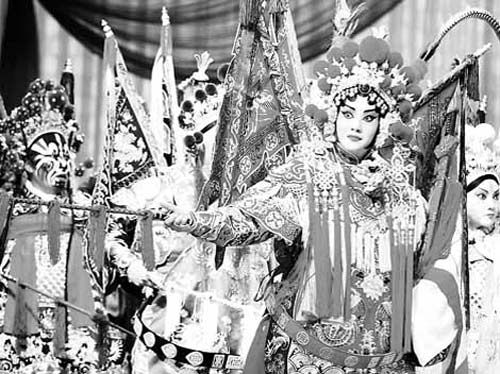
Still from a performance of the Beijing opera Mu Guiying Takes Command.
Source: Naxos "Yellow River" CD (My rip!)
Formats: FLAC (RAR), DDD Stereo, mp3(320)
File Sizes: 249 MB / 129 MB (FLAC version incl. covers & liner notes)
Download Link – [Add to my reputation and send me a PM requesting the FLAC link!]
mp3 version – https://mega.nz/#!Up0FVCiS!CRxNumE41XQBGZtdOvz-OI9nGh0NNQ7niFJI4qUoapM
/>
Enjoy! Don’t share! Buy the original! Click on "Reputation" button if you downloaded this album! 🙂
Modern: Avantgarde
The Seventh Symphony is a key work in Hans Werner Henze‘s symphonic production; his confrontation
with the classical- romantic tradition is particularly evident here. “Number 7 of my orchestral pieces is the one that
comes closest to the model of the classical symphony”, he once stated. Until he wrote this one, Henze had not
composed any symphonies for over a decade and meanwhile even admitted to the “impossibility” of “creating any
more symphonies today”. This work became a great success, however, which the listener will be able to palpably
experience with the help of this recording by the G???rzenich Orchestra of Cologne.
Music Composed by Hans Werner Henze
Played by the G???rzenich-Orchester K???lner Philharmoniker
Conducted by Markus Stenz
"The Seventh Symphony by the German composer Hans Werner Henze was written in 1983-84.
It was commissioned by the Berliner Philharmoniker as part of the orchestra’s centenary
celebrations in 1982.
Unlike its immediate predecessors, Henze has stated that this work is very much a ‘German’
symphony, in the Beethovenian tradition.[1] Accordingly, it is cast in four movements and is
broadly analogous to the ‘classical’ form: Introduction, slow movement, Scherzo and Finale.
However Henze uses even more traditional German motifs across the movements: an allemande
(a German dance) in the first and Liedform in the second. For the two final movements he
focuses on the eighteenth-century poet Friedrich H???lderlin, incarcerated at T???bingen where he
was subjected to what amounted to torture in the name of medical intervention. The final
movement is a deeply lyrical orchestral setting of H???lderlin’s late poem H???lfte des Lebens
(Half of Life)."
Source: Oehms Classics CD (My rip!)
Formats: FLAC (RAR), DDD Stereo, mp3(320)
File Sizes: 271 MB / 161 MB (FLAC version incl. covers & booklet)
Download Link – [FLAC link available by PM request/reputation-add only!]
mp3 version – https://mega.nz/#!g8EARRTB!Z1IFY5niRZ5mqryGtGiTSkSVn5kcoh8koBK6Vj_wnGA
Enjoy! Don’t share! Buy the original! Click on "Reputation" button if you downloaded this album! 🙂
Modern: Various
Conductor Mark Mandarano and the Sinfonietta of Riverdale offer live performances of
American music recorded at their annual series of concerts. The program ranges from America’s past
to present with luminaries from the past (Walter Piston) to the present time with three
generations represented by John Corigliano, Ellen Taaffe Zwilich, Byron Adams, and
Oliver Caplan. A survey that shows us where we have been, where we are, and where we are
headed.
Music by Walter Piston, Byron Adams & Oliver Caplan
And John Corigliano & Ellen Taaffe Zwilich
Played by the Sinfonietta of Riverdale
Conducted by Mark Mandarano
"The Sinfonietta’s reputation for fine musicianship and stimulating programming has
been recognized by the public and the press. The ensemble has performed the music of world-
renowned composers and has a history of commissioned works, one of which (Lunastella) is offered
on this recording. Founded in 2008 by artistic director and conductor Mark Mandarano, the
Sinfonietta’s recordings also appear on the Arabesque label. In addition to the Sinfonietta,
Mandarano has served as principal guest conductor of the Moscow Chamber Orchestra and has
led performances of the Los Angeles Philharmonic, Houston Symphony, New Jersey Symphony,
and N???rnberger Symphoniker, among others. He is a graduate of Cornell and the Peabody
Conservatory music and is director of instrumental music at Macalaster College."
Source: Albany Records CD (My rip!)
Formats: FLAC (RAR), DDD Stereo, mp3(320)
File Sizes: 313 MB / 158 MB (FLAC version incl. cover & booklet)
Download Link – [FLAC link available by PM request/reputation-add only!]
mp3 version – https://mega.nz/#!Y5kAlIqA!1mIvJle_HHwIRHLLw9MSs3Ld7Byn3fSaytXvyfkDKY8
Enjoy! Don’t share! Buy the original! Click on "Reputation" button if you downloaded this album! 🙂
Modern: Avantgarde
Boreas is the first monograph devoted by Trit??? to the work of David del Puerto.
It takes the title of the composer’s Symphony No. 1, the work that opens the album, which is
followed by other works composed between 1997 and 2004. David del Puerto has become one of the
key composers on the Spanish scene. Quality music recorded by leading orchestras which include the
Radio Symphony of Finland, JONDE, Sinf???nica de RTVE and Real Filharmonia de Galicia.
Music Composed by David Del Puerto
Played by the Finnish Radio Symphony Orchestra & Orquesta Radio Televisi???n Espa???ola
And the Joven Orquesta Nacional de Espa???a & Orquesta Real Filharmon???a de Galicia
Conducted by Sakari Oramo, Pablo Heras, Josep Caball??? & Pedro Halffter
"David del Puerto was born in Madrid in 1964. He studied guitar with Alberto Potin, harmony with
Jes???s Mar???a Corral and composition with Francisco Guerrero and Luis de Pablo. Since 1985 he has
participated in many festivals and concerts in The Netherlands, Belgium, France, UK, Italy, Spain,
Japan, USA, etc., where his music has been performed by many international soloists, ensembles
and orchestras. He has received commissions from several institutions and performers, such as
Ensemble InterContemporain, CDMC-INAEM (Spain), Fundaci???n Juan March, Geneva City Hall,
Ars Musica Festival, Fundaci??? de M???sica Contempor…nia de Barcelona and others. He has given
lectures and taken part in forum discussions in Madrid, Amsterdam, Brussels, Middelburg and
Valencia, and has taught composition at conservatories in Holland and Spain. In 1993 he won
the Gaudeamus Prize with his Oboe Concerto. That same year he received the prize "El ojo cr???tico"
of RNE (Spanish National Broadcasting). The Spanish Ministry of Culture has recently awarded
him its National Music Prize for 2005."
Source: Trit??? CD (My rip!)
Formats: FLAC (RAR), DDD Stereo, mp3(320)
File Sizes: 296 MB / 156 MB (FLAC version incl. cover)
Download Link – [Add to my reputation and send me a PM requesting the FLAC link!]
mp3 version – https://mega.nz/#!N0ESlKSS!PuG2nsE8xAeWAR5aoae1-JKHGs-824N9Z0iyXYGKeSk
/>
Enjoy! Don’t share! Buy the original! Click on "Reputation" button if you downloaded this album! 🙂
Modern: Neo-Romantic
Resident Director of the Santiago Philharmonic Orchestra, conductor and composer
Jos??? Luis Dom???nguez is one of Chile’s leading musicians. Set in California during the
Gold Rush of the mid-nineteenth century, The Legend of Joaqu???n Murieta is both an exciting
contemporary ‘action ballet’ and a stand-alone work in the great tradition of symphonic
film music. Its subject is the Californian brigand Joaqu???n Murieta, often seen as the
inspiration for Zorro, and the struggle of a small settlement against the Galgos
(The Hounds), a North American gang of vigilantes who harass immigrants and Native
Americans.
Music Composed and Conducted by Jos??? Luis Dom???nguez
Played by the Santiago (de Chile) Philharmonic Orchestra
"Born in 1971, Jos??? Luis Dom???nguez has been a prominent figure in his native Chile as a conductor,
but at the turn of the century turned his attention to composition. This was soon to bring about a full-
length ballet, The Legend of Joaquin Murieta, the story centring on California at the time of the Gold
Rush when a North American gang were terrorising the native Americans and the immigrants from
South America so as to drive them from that part of the world recently ceded to the USA. Dom???nguez
states that he wants the music to stand alone without the ballet scenario, but I guess you will want to
follow the story as set out in the accompanying booklet. Without that you would imagine the score as
having come from a leading Hollywood screen writer supplying the backdrop to a highly charged film
depicting American life that is long past. Imaginative in his scoring and often reminding of Ferde Grofe’s
epic American suites, the music is readily accessible, the first act dance of the drunken gang being
very funny, while the second act Pas de deux is an imposing and beautiful score. On stage, this must
add-up to a colourful and active ballet with the music as its backdrop. My first encounter with the
Santiago Philharmonica is one of admiration for an orchestra that could rival any of North America’s
provincial ensembles, with every department displaying their solo skills, and there is certainly no
lack of corporate virtuosity. The sound engineering is high on impact, with the Teatro Municipal in
Santiago becoming a fine recording venue."
David’s Review Corner
Source: Naxos Records CD (My rip!)
Formats: FLAC (RAR), DDD Stereo, mp3(320)
File Sizes: 476 MB / 228 MB (FLAC version incl. covers & booklet)
Download Link – [FLAC link available by PM request/reputation-add only!]
mp3 version – https://mega.nz/#!x0FXmDJS!IrnyRyQTnxizg9AQTPrLVRwGN_poWcfNO2mnwG-EUrA
/>
Enjoy! Don’t share! Buy the original! Click on "Reputation" button if you downloaded this album! 🙂
Late Romantic
Two very important orchestral/choral works by Sir George Dyson (1883-1964). Interest in Dyson’s
music is gradually stirring to life after decades of neglect. St Paul’s Voyage to Melita and
Agincourt both show Dyson’s love of words and voices. St Paul’s Voyage is a choral work in one
movement with a part for solo tenor linking various sections of the narrative. Agincourt, a piece in
six sections divided by short orchestral links, takes words from Shakespeare’s Henry V. Nocturne is
written for solo tenor, solo viola, strings, harp and organ, and uses the words of the poet Robert Herrick.
Music Composed by Sir George Dyson
Played by Bournemouth Symphony & Royal Philharmonic Orchestras
With Neal Mackie (tenor), Ossian Ellis (harp) & Jane Watts (organ)
And Royal College of Music Chamber Choir & Bournemouth Symphony Chorus
Conducted by Sir David Willcocks
"Nocturne (from Quo Vadis) is a reissue taken from a 1988 Unicorn-Kanchana release, and now that the
complete work is available from Chandos its presence is less of a draw than it once might have been.
However, the other two works are new recordings, and very important additions to Dyson???s catalog of
choral music. St. Paul???s Voyage to Melita has the singular advantage of depicting a storm at sea, which
the composer does with evident relish despite the somewhat austere orchestral palette. The reason for
this becomes clear at the end: when St. Paul and his passengers make it safely to dry land, bass drum
and chimes create an effect as simple as it is overwhelming.
Agincourt is an appropriately more gutsy setting of works from Shakespeare???s Henry V, and it includes
the same Agincourt Song that William Walton made famous in his score for the film version of the play.
Both works share the virtues of comparative brevity (about half an hour apiece) and directness, and it???s
very easy to imagine the great choral societies for which they were written enjoying them very much in
performance. Indeed, it would be very nice if an American choir or two would start exploring this
repertoire rather than inflicting yet another Requiem (pick one) or Carmina Burana on their audiences.
These are well-crafted crowd pleasers, plain and simple, and as such they deserve to be enjoyed by
a wide audience of choral music enthusiasts."
Classics Today
Source: Somm Recordings CD (My rip!)
Formats: FLAC (RAR), DDD Stereo, mp3(320)
File Sizes: 278 MB / 155 MB (FLAC version incl. cover & composer bio)
Download Link – [Add to my reputation and send me a PM requesting the FLAC link!]
mp3 version – https://mega.nz/#!BkMzHK4S!HShF_KaWKmBigzIkyjMUYYEiwQKNqpLsNzIiJjubNuw
Enjoy! Don’t share! Buy the original! Click on "Reputation" button if you downloaded this album! 🙂
Late Romantic
August Klughardt was born in Cothen and studied there, in Dessau and finally in Dresden (1866???7).
After conducting posts in Posen (1867???8), Neustrelitz (1868???9) and L???beck (summer 1869), he moved to
Weimar in 1869 and came within the orbit of Liszt. He met Wagner in 1873. His music became influenced
by the New German School: in particular his Symphony No.1 Lenore and his Second Symphony in F
minor. He returned to Neustrelitz in 1873 as music director and then to Dessau in 1882 as a greatly
respected Hofkapellmeister. His music gradually lost its overt New German characteristics and became a
conscious mix of the current radical and conservative styles. Klughardt’s main areas of composition were
orchestral music (his symphonies and the Violin Concerto were admired), opera (he composed four,
all of which were produced), choral music (of which his great success was his oratorio The Destruction
of Jerusalem) and, towards the end of his life, some high quality chamber music.
Music Composed by August Klughardt
Played by the Anhaltische Philharmonie Dessau
Conducted by Antony Hermus
"I had never come across August Klughardt (1847-1902). There is a statue of him in Dessau, where
he spent most of his career, so he must have been highly thought of there, if nowhere else. I think I
know why I hadn???t heard of him before, if his Symphony No 4 is anything to go by: there is no distinct
musical personality behind the music. You can hear how well schooled in orchestration he is, you can
admire his craftsmanship and the subtle and often imaginative touches of colour he produces, you can
follow the ebb and flow of the structure.
But if the pleasant-enough symphony appears to go through the motions (extended first movement,
chorale-like slow movement, a brief scherzo that sounds like pastiche Beethoven and a finale which,
to quote an early review, ???values contrapuntal work more than thematic invention???), Klughadt???s
Drei St???cke have a more individual flair. The first (Capriccio) features a prominent and highly attractive
duologue with the harp; the second (Gavotte) is a graceful look back at the dance form; the third
(Tarantelle), reminiscent of Rossini???s La danza and every other tarantella you???ve ever heard, has
instant appeal. The Anhaltische Philharmonia Dessau, of which Klughardt was music director from
1882 to 1902, boxes far above its weight under its present director Antony Hermus, and has been
well recorded."
Gramophone
Source: CPO Classics CD (My rip!)
Formats: FLAC (RAR), DDD Stereo, mp3(320)
File Sizes: 285 MB / 127 MB (FLAC version incl. cover & composer bio)
Download Link – [Add to my reputation and send me a PM requesting the FLAC link!]
mp3 version – https://mega.nz/#!Rs8WgKTL!Nt3oYOh9PNQnL2QWtPAQr_gjoDPRvXYS6N9El958kcc
Enjoy! Don’t share! Buy the original! Click on "Reputation" button if you downloaded this album! 🙂
Modern: Avantgarde
This is the first monographic album devoted by the TRIT??? label to one of its most emblematic
composers, Jes???s Torres, one of the foremost figures from his generation and a leading light on
the contemporary Spanish symphonic scene. Jes???s Torres’s music possesses great appeal and expressive
power and makes free use of both dissonance and tonality. In just a few years he has managed to shape
a personal style that revives historical compositional procedures and adapts them to a new, absolutely
up-to-date aesthetic.
Music Composed by Jes???s Torres
Played by the Orquesta Sinf???nica de RTVE & Orquestra de Cadaqu???s
And the Joven Orquesta Nacional de Espa???a
Conducted by Adrian Leaper, Gianandrea Noseda & Josep Caball???
"Jes???s Torres was born in Saragossa on 15 July 1965 of Andalusian descent, and lives in Madrid since
he was ten years old. Born into a family with a long musical tradition, he started learning the violin with
his uncle Jos??? Torres and later entered the Conservatorio Superior de M???sica of Madrid where he received
his academic background. He studied composition privately with Francisco Guerrero from 1986 to 1988.
His catalogue expands for over ninety works and includes fourteen orchestral works and numerous works
of chamber music for the most varied tiped of ensembles. A special interest of his is setting texts to
music, above all the poetry of Vicente Aleixandre, alongside that of other literary figures including San
Juan de la Cruz, Rub???n Dar???o, Miguel Hern???ndez, Juan Eduardo Cirlot and Leopoldo Panero.
He has been the recipient of various awards, including that of the SGAE (Madrid, 1992), of Gaudeamus
(Amsterdam, 1995), the Valentino Bucchi Award (Rome, 1997), the Reina Sof???a Award (Barcelona, 1999),
The Millennium Chamber Players (Chicago, 2008) and the National Music Award 2012.
He spent the 1998-99 season as composer in residence of the National Youth Orchestra of Spain.
Since 2002, all of his compositions have been published by Editorial Trit??? in Barcelona. Four portrait
CDs have already appeared on the Kairos, Verso, Trit??? and Autor labels."
Source: Trit??? CD (My rip!)
Formats: FLAC (RAR), DDD Stereo, mp3(320)
File Sizes: 251 MB / 126 MB (FLAC version incl. cover & composer bio)
Download Link – [Add to my reputation and send me a PM requesting the FLAC link!]
mp3 version – https://mega.nz/#!ch8XBDCZ!h2O8PRc4XTX8LOO8e3dxqXt-uxC7sAZRivQIY5fUxvg
/>
Enjoy! Don’t share! Buy the original! Click on "Reputation" button if you downloaded this album! 🙂
Magnificent.
No.935
Modern: Neo-Romantic/Tonal
The recipient of numerous prestigious awards, Xiaogang Ye is regarded as one of today???s
leading Chinese composers. The Macau Bride is a colourful and evocative ballet based on a
story from the 17th century in which Chinese sailor Chon Kou and Portuguese captain???s daughter
Maria do Mar fall in love following a chance encounter in Bel???m. They set sail for Macau,
survive a storm and an attack by pirates, and are finally reunited and married in Macau.
The Four Poems of Lingnan come from the classical literature of ancient Chinese dynasties,
the songs adding powerful new dimensions to ancient masterpieces.
Music Composed by Ye Xiaogang
Played by the Macau Orchestra
With Liu Mingyan (mezzo-soprano)
And the Macau Youth Choir
Conducted by L??? Jia
"Those who wish for more demanding music, of greater depth, will perhaps not respond to this music.
However, for all its lighter nature this is music that has a natural beauty, finely orchestrated.
The Macau Youth Choir and Macau Orchestra conducted by L??? Jia provide fine performances whilst
mezzo-soprano, Liu Mingyan, is in excellent voice.
Four Poems of Lingnan, Op. 62 (2011) was commissioned by the Cultural Affairs Bureau of Macau
and the Macau Orchestra and sets poems by a number of poets from early dynasties on the
subject of Lingnan, a region of Southern China.
Bidding Farewell to a Friend to the South of the Five Ridges brings a gentle orchestral opening
with flute before tenor, Shi Yijie enters. There are gentle dissonances here and a lovely orchestral
backdrop to the tenor???s fine voice. This setting that opens on the words, ???The overlapping mountains
of old Jiaozhou???, is full of drama and poetry with a dynamic orchestral ending.
Fluttering woodwind lead into the faster moving The Best for Huizhou,a buoyant setting evoking the
opening words, ???Under the Luofu Mountain all seasons are spring???, where Shi Yijie brings a melodic
freshness to the music. Again, subtle little dissonances intrude as the melody flows quickly forward.
A slow gentle melody opens Bidding Farewell to Li Meizhou before the tenor sings a gentle plaintive
setting with some sensitive, poetic orchestral passages with exquisite woodwind sounds. Shi Yijie is
terrific, particularly in the coda, showing fine control.
Brass open Ascending the Zhenhai Tower at Chongyang Day, before orchestral flourishes introduce
the tenor. There are swirling orchestral sounds between the sung texts. This tenor has a powerful
voice, rising to the climaxes magnificently and beautifully controlled in the final poetic conclusion.
If the ballet suite is a lighter, romantic work, then the settings of poems are deeper and more
adventurous in their language. L??? Jia and the Macau Orchestra provide excellent accompaniments
to tenor, Shi Yijie???s, fine voice.
With excellent performances and a fine recording, this new release will appeal to many. There are
informative booklet notes and full English translations of the Chinese texts. More information about
some of the instruments used would have been useful."
The Classical Reviewer
Source: Naxos CD (My rip!)
Formats: FLAC (RAR), DDD Stereo, mp3(320)
File Sizes: 248 MB / 131 MB (FLAC version incl. covers & booklet)
Download Link – [Add to my reputation and send me a PM requesting the FLAC link!]
mp3 version – https://mega.nz/#!01VEUSIA!EopE1Zao7ULk208bwekK8WvRGuvDGmEhXTTe3gotSuM
Enjoy! Don’t share! Buy the original! Click on "Reputation" button if you downloaded this album! 🙂
Modern: Neo-Romantic
Florencio Asenjo???s music is inspired by literature and the visual arts as
these three works so aptly show. El Gran Teatro del Mundo (The Great Stage
of the World) is the title of a sacramental play by Calderon de la Barca, while
Gleanings from the World of Lafacadio Hearn comes musicially from parts of
Hearn’s stories. The Birth of Venus reflects Asenjo’s reaction to Sandro
Botticelli’s Nascita della Venere. This is the sixth release of Asenjo’s orchestral
music to be released on Albany Records.
Music Composed by Florencio Asenjo
Played by the Bohuslav Martinu Philharmonic Orchestra Zlin
Conducted by Kirk Trevor
"Mathematics professor emeritus Florencio Gonzalez Asenjo died June 10, 2013. He was 86.
A native of Buenos Aires, Asenjo earned his PhD from the University of La Plata, Argentina.
He taught at LaPlata, then headed the calculus and statistics section of the Argentine Laboratory for
Testing Materials and Technological Investigations before coming to the United States in 1958 to take
a faculty position at Georgetown University. Asenjo also taught at the University of Southern Illinois
before joining the Pitt mathematics faculty as an associate professor in 1963. He rose to full professor
in 1966 and retired in 2001.
Asenjo enjoyed an international reputation in the study of mathematical theory, lecturing in Argentina,
Brazil, Venezuela, Spain, Portugal, Bulgaria, Poland, Romania, the Netherlands, France, England,
Sweden, Liechtenstein, Belgium and India, with research published in journals around the world.
He also wrote symphonic music, having studied with Spanish composer Jaime Pahissa. He composed
music for piano as well as chamber music and orchestral pieces. His works have been performed by
the Eastman Philharmonic, Eastman Wind Ensemble, U.S. Air Force Band, American University
Orchestra, LaPlata Symphony Orchestra, Slovak National Symphony Orchestra, the Bulgarian
Philharmonia and the Warsaw National Philharmonic Orchestra.
While he continued to write and lecture in his field, in his retirement Asenjo turned additional
attention toward his music. He completed the recording of his 10th major work in May.
James V. Maher, provost emeritus, remembered Asenjo as kind and gracious. ???He was a very
dedicated professor and a good colleague. He put a lot of effort into making Pitt a wonderful university.???
Math department colleague Anna Vainchtein, who became friends with Asenjo when she arrived
at Pitt in 2000, remembered him as very passionate about his work, both in mathematics and music.
???After Florencio retired and had more time to compose music, a number of CD recordings of his work
were made by various European orchestras, with Kirk Trevor as the conductor, and Florencio traveled
to Europe for each recording. When we met for lunch, he would always tell me about his new CD,
the artwork he selected for the cover, the story behind the music and the new project he was working
on. We would also talk about poetry, politics, mathematics and so many other things that interested
him,??? she said.
???Florencio was full of life. Most people half his age do not have the incredible amount of energy he had.
He was always looking forward to his next project, his upcoming travels, a mathematics lecture he
was going to present. It is very sad that he is no longer here, and I will miss him a lot.???
Juan J. Manfredi, vice provost for undergraduate studies and professor of mathematics, said, ???He
was a true renaissance man. His area of expertise was mathematical logic but he also worked in
philosophy ??? he was always attracted to philosophy ??? and he was a gifted musician. He was a
classical professor, interested in understanding the world. A new renaissance man: He was not
only good at these things, but he had interest in them.???
Source: Albany Records CD (My rip!)
Formats: FLAC (RAR), DDD Stereo, mp3(320)
File Sizes: 325 MB / 161 MB (FLAC version incl. cover & booklet)
Download Link – [Add to my reputation and send me a PM requesting the FLAC link!]
mp3 version – https://mega.nz/#!pw9wmJaS!vSl7z83DiazmMPVhWS8mLVsP90JNGfUp8IntxEd1i8k
Enjoy! Don’t share! Buy the original! Click on "Reputation" button if you downloaded this album! 🙂
Modern: Tonal
In the twenty years since his death the star of the Polish-born Moscow-based
Mieczysław Weinberg (1919???96) has risen rapidly: his music ??? a highly individual
amalgam of the Jewish idioms of his youth and the style of his mentor and friend Dmitri
Shostakovich ??? is now seen as one of the most distinctive contributions to twentieth-
century music. This further installment in the Toccata Classics examination of his output
couples a mature dance-based score, the Choreographic Symphony ??? not performed
before this recording ??? with his last symphony, Symphony No.22, orchestrated after
his death by the composer Kirill Umansky.
Music Composed by Mieczyslav Weinberg
Played by the Siberian Symphony Orchestra
Conducted by Dmitry Vasiliev
"From 1958 The White Chrysanthemum ballet in three acts after A. Rumnev and J. Romanovich has a
scenario based on a girl who is blinded at Hiroshima but later has her sight restored by Soviet doctors.
The ballet was never staged probably due to difficult political relations with Japan around that time.
No score has been found and it is even possible that Weinberg left the ballet unorchestrated. It was
Weinberg himself who extracted the Six Ballet Scenes and orchestrated them as the Choreographic
Symphony and dated the manuscript July 1973. This is a memorable score, full of delicious contrasts,
often percussion laden in a similar way to late Shostakovich. In the energetic and restless opening
Allegro the forceful percussion seem to be jousting with the strings and the following Adagio is
infused with an exotic middle-eastern flavour. Appealing is the playful and dance-like Allegretto and
the dark mystery of the Adagio-Moderato is heavy with foreboding. Especially engaging, the
penultimate movement an Adagio contains some gloriously melodic writing that could have easily
come from the pen of Rachmaninov. Ending the work the Presto just bristles with raw energy.
Towards the beginning of the movement the music contains a definite klezmer feel but overall
has all the vivacious force of Prokofiev.
Illness delayed Weinberg???s writing of his Symphony No. 22 and it was left unfinished at his death
in 1996. Dedicated to Olya his wife the unfinished manuscript was completed in piano version only.
Weinberg???s widow suggested to Kirill Umansky that he might orchestrate the score. Immersing
himself in Weinberg???s symphonic music Umansky completed the orchestration and the first
performance was given by the Belgorod State Philharmonic Orchestra in 2003. The symphony
steeped in melancholy is notable for its bleak rather severe character and sense of foreboding.
I found little in the way of contrast throughout the three movements and although it???s not a work
I especially enjoyed its intensity and severe emotions are certainly hard to ignore. At just under
25 minutes the opening movement is over double the length of the next longest. Titled Fantasia
the writing contains a feeling of intense sadness and a searching quality combined with a near
constant icy chill. Relatively short at just over 5 minutes the second movement an Intermezzo
contains that now familiar bleakness although it???s not quite as harsh. Titled Reminiscences
the Finale eschews originality returning to the austere character of the opening movement."
Musicweb
Source: Toccata Classics CD (My rip!)
Formats: FLAC (RAR), DDD Stereo, mp3(320)
File Sizes: 290 MB / 168 MB (FLAC version incl. cover & booklet)
Download Link – [Add to my reputation and send me a PM requesting the FLAC link!]
mp3 version – https://mega.nz/#!xssykD4Y!DTHgaWgfdzcq6uTkG7T1umX9iEmtwW7KjzQIXf9Wo8o
Enjoy! Don’t share! Buy the original! Click on "Reputation" button if you downloaded this album! 🙂
Modern: Americana
Portraits of Colorado (An American Symphony No.1) is the first in a series of symphonies
composed by Charles Denler. Inspired by a sunrise over the Rocky Mountains, and the incredible
works of American painter, Jerry Malzahn, this first symphony carries with it a theme of hope and
of new beginnings. Charles Denler’s multiple Emmy Award-winning music for film and television is
known worldwide, and his orchestral works have been played by top orchestras. Charles’ classical
training and strong proficiency with contemporary sound allow him great flexibility and versatility
as a composer and pianist. On this album, the Colorado Symphony and Chorus perform his tuneful
and evocative music with great style. We are delighted to present the premiere recording of his
new symphony on Fresh! from Reference Recordings.
Music Composed by Charles Denler
Played by the Colorado Symphony Orchestra
With Yumi Hwang-Williams (violin) & Charles Denler (piano)
And the Colorado Symphony Chorus
Conducted by Scott O’Neil
"Portraits of Colorado is a new composition by Charles Denler on Reference Recordings Fresh label.
The ten movement Symphony Number 1 was inspired by Denler’s view of the Rocky Mountains from
his Colorado home. It’s an ambitious work for orchestra and chorus, and when listening, it sounded a
bit like a soundtrack for a movie or an IMAX documentary. As a result, it wasn’t too surprising that
Denler has written for film and TV. That’s not a knock, it’s just that the music has that kind of sound.
The ten short movements were also a bit surprising. In the liner notes, Denler states that young
people are accustomed to playlists and shorter pieces of music, so he obliges with ten short
movements. I think he might be selling serious music lovers who are young a bit short, but
he’s the composer and he can construct his symphony any way he wants.
The music itself is quite listenable. There are certainly some references to ‘Americana’ and some
‘Coplandesque’ flourishes, but the symphony is a good listen. The performance by the Colorado
Symphony and Chorus conducted by Scott O’Neil is a fine one, and the HDCD recording is beyond
criticism. There is a stable image of the orchestra, nice rendering of hall ambiance, and a wide
dynamic range, owing in part to the HDCD format, which my Oppo BDP-103 can decode.
The disc finishes with Denler’s Six Variations for Violin and Piano are based on themes from the
Symphony. These are also well-recorded by closer in microphones, and the sound is resonant
and full bodied. The music in the disc was influenced by American painter Jerry Malzahn, and
examples are showcased in the liner notes.
The CD as a whole is a worthwhile listen. There’s nothing deep here, just evocative music well-
played and well-recorded. All in all, 44 minutes well spent."
Mel Martin, The Audiophile Audition
Source: Reference Recordings CD (My rip!)
Formats: FLAC (RAR), DDD Stereo, mp3(320)
File Sizes: 219 MB / 127 MB (incl. cover & booklet)
Download Link – [no longer available]
mp3 version – https://mega.nz/#!2yAS1SYZ!5oe4hMI7zkca7lT-ReWrFpiLq-T8tLD2T9j0cGU-H0o
/>
Enjoy! Don’t share! Buy the original! Click on "Reputation" button if you downloaded this album! 🙂
Modern: Tonal
The Symphony No.6, composed in 1967, is Malcolm Arnold’s shortest symphony (about 25 minutes),
has three movements and was premiered the following year with the composer on the podium. The first of the three
movements suggests improvisational jazz, an influence often found in Arnold???s music, and in the second we have
once again a powerful Mahleresque funeral march. The third is replete with brass fanfares and ends, as did the
Symphony No.5, with bells, but here they are triumphant.
The Tam O’Shanter Overture was completed in March 1955. The overture is a piece of programme
music based on the famous poem by Robert Burns. Arnold musically depicts Tam on the trombone, drunkenly
clambering on to his mare Meg, encountering the raucous scene at Kirk Alloway before being chased across
the Brig o’Doon. The work was first performed at the BBC Proms on 17 August 1955, with the composer
conducting the Royal Philharmonic Orchestra.
The ballet Sweeney Todd was composed in 1959. It is a one-act ballet based on the legend of
Sweeney Todd. The scenario and original choreography were by John Cranko and the scenery and
costumes by Alix Stone in the style of Victorian toy theatres. In 1984, the composer David Ellis
compiled a 20-minute concert suite, from the ballet in collaboration with the composer.
Fantasy on a Theme of John Field for piano and orchestra is another astonishing creation,
enjoyably bonkers in its disparate stylistic borrowings and wild mood-swings, yet also
wholly characteristic in its urgently communicative manner.
Music Composed by Malcolm Arnold
Played by the Royal Philharmonic Orchestra
With John Lill (piano)
Conducted by Vernon Handley
"How long will excuses need to be made for the greatness of Malcolm Arnold as a symphonist?
Apparently exactly as long as he insists on being bitterly banal and hopelessly vulgar, along with
wonderfully lyrical and brilliantly colored and inexorably driven and powerfully argued. Is this a
good thing? Perhaps it is not, but it is nevertheless a great thing. As his Symphony No. 6,
completed in the summer of 1967, shows, Arnold was as great a symphonist as Tippet or
Walton, but he was a harder, tougher, and sharper composer than them. And such a cornball:
the Sixth has pages of solemn and profound thought juxtaposed against page after page afte
page of vulgar banality.
And, amazingly enough, Vernon Handley is such a serious and conscientious conductor and
the Royal Philharmonic performs Arnold’s Sixth with such gusto and virtuosity that it all works.
And it works not just in the symphony, but in every other work on the disc, as well: the Chico
Marx meets Spike Mulligan of Arnold’s Fantasy on a Theme of John Field, with the piano solo
performed by the indefatigably hilarious John Lill; the fractured fairy tale and low comedy of
Arnold’s Concert Suite from his ballet Sweeny Todd — the demon barber of Fleet Street —
performed with inexhaustible good humor and a certain degree of grim determination;
the galloping banality and breezy vulgarity of the Tam O’Shanter Overture, which is
interpreted with such tight-lipped intensity by the serious Handley and such virtuosity
by the R.P.O. that when Arnold bursts into a massive orchestral imitation of a bagpipe
followed by a monumental hornpipe, all you can do is laugh."
All Music
Source: Conifer Records CD (My rip!)
Formats: FLAC (RAR), DDD Stereo, mp3(320)
File Sizes: 372 MB / 177 MB (FLAC version incl. covers & booklet)
Download Link – [Add to my reputation and send me a PM requesting the FLAC link!]
mp3 version – https://mega.nz/#!xlFhlbJC!Fhq3bICEnKfu9q9HwaQCg1J6SXjYO2c3dWAr06EI4Q8
Enjoy! Don’t share! Buy the original! Click on "Reputation" button if you downloaded this album! 🙂
Modern: Avantgarde
Joan Guinjoan???s (*1931) musical training was undertaken in Barcelona and Paris,
where he won many important prizes. In 1964, after following a busy career as a pianist,
he established contact with the French musical avant-garde and decided to devote himself
solely to composition. Guinjoan has received commissions from many soloists, chamber music
groups, and orchestras. Together with Juli Panyella, Guinjoan founded the ensemble
Diabolus in Musica. He has conducted various ensembles and symphony orchestras both in
Spain and abroad. Notable amongst his conducting achievements was the Spanish premiere
of Stravinsky???s Histoire du soldat. Between 1968 and 1975 Guinjoan was music critic
for the newspaper Diari de Barcelona. Guinjoan???s music is celebrated in an extensive
list of recordings, some conducted by himself.
Music Composed by Joan Guinjoan
Played by the Orquestra Simf???nica de Barcelona i Nacional de Catalunya
And the Orquestra de Cad???ques
Conducted by Ernest Mart???nez Izquierdo & Neville Marriner
Source: Trit??? CD (My rip!)
Formats: FLAC (RAR), DDD Stereo, mp3(320)
File Sizes: 295 MB / 158 MB (FLAC version incl. cover & composer bio)
Download Link – [Add to my reputation and send me a PM requesting the FLAC link!]
mp3 version – https://mega.nz/#!150m2ATZ!K_GnrC6CpevH3UqPgeR1_QDrS3OFxjBMtfzxsIT9PoM
Enjoy! Don’t share! Buy the original! Click on "Reputation" button if you downloaded this album! 🙂
i’ve to gratulate your upload of contemporary american symphonies is highly valuable.
Best
Modern: Tonal
epicting 12th-century Persian poet Farid ud-Din Attar’s dramatic narrative,
New York-based composer and GRAMMY-nominated conductor Jonathan Sheffer
presents his orchestral work The Conference of the Birds, commissioned
for the Cabrillo Festival of Contemporary Music, on Navona Records. Attar’s
poem of the same name is a journey of transformation and conviction, in which the
birds of the world seek to find an illustrious leader, ultimately ending with new
insight into their spiritual identities. The allegory portrays our own doubts,
fears, and faults, how we confront these issues, and how we seek to understand
identity and our relationships with other humans, the natural world, and what
lies beyond.
Masterfully performed by the Moravian Philharmonic Orchestra, conducted
by Sheffer himself, the music illustrates several events in the poem: the Hoopoe’s
assembly of the birds, with their uncontrolled chatter; the birds’ individual
arguments, revealed in a series of refusals to embark on the spiritual journey;
the difficulties of the journey itself; the final arrival at the Simorgh’s court;
and the transcending conclusion to their quest.
Music Composed and Conducted by Jonathan Sheffer
Played by the Moravian Philharmonic Orchestra
With Joyce DiDonato (narrator)
"Sheffer’s range of works comprises television and feature film scores, works for orchestra,
solo piano, concerti, musicals, and short operas.
The focus of a Guggenheim Works & Process series event in October 1999, Sheffer’s opera
Blood on the Dining Room Floor, which uses text from Gertrude Stein, received the Richard
Rodgers Production Award from the American Academy of Arts and Letters and was produced
off-Broadway in 2000, Sheffer has had fellowships at both Yaddo and The MacDowell Colony,
and in 2003 was a Visiting Artist at the American Academy in Rome.
He has continued his film scoring career, finding himself in demand for movies with a colorful,
dramatic element. These included work on Omen IV, Bloodhounds of Broadway, Darkman
(a collaboration with Danny Elfman), In a Shallow Grave, Alien 3, Interview with the Vampire,
Michael Collins, Sphere, Batman Forever, and Batman and Robin as well as the recent
documentaries, HBO’s Mann v. Ford (2010) and The Decent One (2014).
His symphonic conducting debut was in 1991 with the San Diego Symphony Orchestra.
In 1992 he was assistant to Michael Tilson Thomas at both L’Orchestre National de France
and the London Symphony Orchestra.
In 1995 Sheffer founded Eos Orchestra, an innovative organization which specializes in
new and neglected music. Eos concerts were featured frequently on NPR’s Performance
Today, and in 1999 Sheffer conducted Eos at a ceremony held at the White House for
the presentation of the National Medal of Arts and Humanities.
Sheffer and Eos Orchestra received a GRAMMY nomination for their collection of rare
film music by Aaron Copland, Celluloid Copland, as well as recorded for a PBS program
on Aaron Copland for broadcast in November 2000.
Sheffer has conducted the American Ballet Theatre at the Metropolitan Opera, as well
as the Brooklyn Philharmonic, in 1997 performances of the Mark Morris Dance Company
at Brooklyn Academy of Music. In 1996, he led the Scottish Chamber Orchestra with
the Martha Graham Dance Company at the Edinburgh Festival.
Sheffer graduated from Harvard University and later attended The Juilliard School
and Aspen School of Music. His teachers included Leonard Bernstein, Jay Gottlieb,
and Leon Kirchner."
Source: Navona Records CD (My rip!)
Formats: FLAC (RAR), DDD Stereo, mp3(320)
File Sizes: 188 MB / 119 MB (FLAC version incl. cover & liner notes)
Download Link – [FLAC link available by PM request/reputation-add only!]
mp3 version – https://mega.nz/#!w10XEarT!tLjRA-gfbdFzg_cFbyJfproToArpKrU5Dad0AIOem-c
Enjoy! Don’t share! Buy the original! Click on "Reputation" button if you downloaded this album! 🙂
Modern: Light/Neo-Romantic
An album chock full of light (and not quite so light) shorter orchestral works
by Anthony Collins (1893-1963).
The Hastings-born Collins is best remembered as a conductor of other people’s works,
most notably a cycle of Sibelius symphonies he recorded with the LSO in the 1950s. His own compositional
output includes several operas, violin concertos and a variety of bonbons, the most popular of which.
Vanity Fair, is included in this collection. The most substantial work, the Symphony for Strings,
displays his superb craftsmanship in writing for string orchestra, but he’s quite the orchestrator when
working with the full symphonic aggregate, too.
Victoria the Great is one of Collins’ several film scores, and full of the expected "trappings".
All in all, a very delightful disc which no lover of British Light Music should overlook.
Music Composed by Anthony Collins
Played by the BBC Concert Orchestra
Conducted by John Wilson
"The name Anthony Collins (1893???1963) calls up for older collectors the distinguished conducto
r of highly regarded interpretations of late-Romantic music recorded for the English Decca/London
label, especially his then-definitive Sibelius cycle. Not many knew about his parallel extensive
work as a film composer???some dozens of scores written during the 1930s and 1940s, plus even
a handful of post-war Hollywood films, such as ???Swiss Family Robinson.??? And yet this former
orchestral violist and pupil of Holst also produced a catalog of large-scale concert music,
including four symphonies and two violin concertos, many of which were never published
and are now considered lost.
So this varied and lively survey of his work as a composer???the first recording of its kind ever???
is reduced to highlighting some of his more modest pieces, intended for either film or radio
broadcast and in a few instances approaching the category of ???light music.???"
Fanfare
Source: Dutton Epoch CD (My rip!)
Formats: FLAC (RAR), DDD Stereo, mp3(320)
File Sizes: 317 MB / 170 MB
Download Link – [Add to my reputation and send me a PM requesting the FLAC link!]
mp3 version – https://mega.nz/#!cw9XgCbA!OdlU6TevlGF73Pm1hhZd70womhaegVLjp9RakEG8sqM
Enjoy! Don’t share! Buy the original! Click on "Reputation" button if you downloaded this album! 🙂
Modern: Tonal
I shared this album before in a separate thread, but that link is dead.
And it fits very nicely in here anyway:
"Well, The Island???s an old work; you???ve got to bear in mind the history of that particular work,???
and he outlines how he was commissioned to do a score for a video-game which led to him booking an
entire orchestra and choir, ???and as soon as I finished the computer game, I whipped out my new
symphony and recorded it for nothing there and then! I???m really proud of it. My mum???s used that
particular symphony for cancer healing for the last ten years, quite successfully actually."
Jaz Coleman
Jeremy "Jaz" Coleman (*1960) has had his hand in many genres of music, from post-punk angst
to composing classical music. A Londoner residing in New Zealand, Coleman came to the
public’s notice singing and playing keyboards in the band Killing Joke in 1978.
As Killing Joke’s career began to slow down in the early ’90s, their singer worked
with Art of Noise member Anne Dudley on the 1991 Middle Eastern themed Songs from
the Victorious City. Coleman teamed with Killing Joke bassist Youth and collaborated
on two symphonic albums: 1994’s Symphonic Music of the Rolling Stones and 1995’s
Us and Them: Symphonic Music of Pink Floyd. In 2000, Coleman arranged his third
symphonic work Riders on the Storm: The Doors Concerto, featuring virtuoso
violinist Nigel Kennedy performing as the voice of Jim Morrison.
Music Composed by Jeremy "Jaz" Coleman
Played by The Auckland Philharmonia
With Hinewehi Mohi (soprano) & Steve Howe (guitar)
And the Viva Voce Chorus
Conducted by Peter Scholes
Source: Killing Joke Records CD (My rip!)
Formats: FLAC (RAR), DDD Stereo, mp3(320)
File Sizes: 253 MB / 122 MB (FLAC version incl. covers & booklet)
Download Link – [Add to my reputation and send me a PM requesting the FLAC link!]
mp3 version – https://mega.nz/#!E49mwIbI!rAZzSAEHq3S-Tf-ErlJ4clB1Y2YvjTbEpXgoCNDNaUk
/>
Enjoy! Don’t share! Buy the original! Click on "Reputation" button if you downloaded this album! 🙂
Modern: Tonal
As he grew older, Arthur Honegger (1892-1955) more and more embraced Catholicism. And as he lived
through the war, the occupation, and the liberation, he wrote his Symphony No.3 "Liturgique" as "the
reaction of modern man against barbarity, stupidity, sufferings, mechanism, and bureaucracy." Composed
between October 1945 and April 1946, Honegger described his symphony as "a drama which is enacted, if you
like, between three characters, real or symbolic: misery, happiness and man. These are eternal themes. I
have tried to bring them up to date." The work was premiered in August 1946 by Charles M???nch in Switzerland.
The "Liturgique" is scored for large orchestra and set in three movements with titles taken from the
Catholic liturgy: "Dies Irae," "De profundis clamavi," and "Dona nobis pacem." As Honegger vividly described
them to a friend: "Dies Irae" is "Human terror in from of divine wrath…Day of Wrath! There is a rapid
succession of violent themes…there is not time to breathe, no time to think, the hurricane carries everything
before it, sweeps everything away. Blindly, furiously…"; "De profundis clamavi" is "the painful mediation
of man forsaken by divinity — a meditation which is already a prayer…And how hard it is to put inside
human mouths a hopeless prayer!"; and "Dona nobis pacem" is "Collective stupidity as a heavy-footed
march for which I wrote a deliberately idiotic theme…a feeling of rebellion dawns in the ranks of the
victims…a huge clamor thrice repeated breaks from the oppressed throats…a song of peace soars
above the symphony as the dove soared in the old days above the immensity of the ocean."
Honegger’s Symphony No.2 ("for Strings") was begun in 1937 as a commission from Paul Sacher
of the Basel Chamber Orchestra. But the rising international tensions in the late 1930s and finally the
start of the war in 1939 interrupted its progress and the "Symphonie pour cordes" was not completed
until 1941 and was premiered by Sacher in 1942. As much as Vaughan Williams’ Fourth or Shostakovich’s
Seventh, Honegger’s Second is a war symphony. Cast as all Honegger’s symphonies are — in three
movements — the work charts the same course as Beethoven’s Fifth, the course from darkness to light.
The Second opens with a weighty Molto moderato wrenched into a bludgeoning Allegro; moves through
a "somber, not to say, at times, positively hopeless" Adagio mesto; and ends in a climactic Vivace non
troppo — Presto. In the closing pages, Honegger calls for a solo trumpeter ad lib who "calls forth a
golden sun on the horizon. Joy conquers at last, but only at the very last moment." Honegger’s
language is astringent, but still tonal, his rhythms abrasive and propulsive, his forms lithe but
monumental, his intentions noble, and his success complete.
Arthur Honegger’s Rugby (1928) takes a place among the composer’s best-known orchestral
works. Rugby is the second in a series of "mouvements symphoniques". These short, intense works
took their inspiration in part from purely practical concerns: Honegger observed that orchestras
often tended to turn away from modern music, preferring to stick to time-tested repertoire; by
expressing his ideas in the compact "mouvement symphonique" format, he hoped to give them
greater potential for success among conductors and audiences alike. Per the suggestion of its title,
there is hardly a dull moment in Rugby. A rapid ascending figure in the violins heralds a flurry
of activity. A fast triplet figure repeats numerous times until the trombone enters with a fragment
of the "sport" motive. This theme, as it were, takes a while to develop more fully; like a ball being
passed about, it restlessly moves from one instrumental grouping to another. A more lyrical line
emerges from the violins, but is soon swept away in a flurry of activity.
Pacific 231 caused a sensation at its May 8, 1924, Paris premiere, ushering in a trend toward
mechanistic works, a trend that influenced even giants like Prokofiev, in his Symphony No. 2, and
the then Paris-based lesser light American composer George Antheil in his riotous Ballet m???chanique.
But Pacific 231 (this is really the subtitle and Mouvement symphonique No. 1 the actual title),
never caught on like other sensational Paris premieres, such as Stravinsky’s The Rite of Spring. Still,
it is hardly a neglected piece today, and how many twentieth century works can approach the
popularity of Stravinsky’s masterpiece? Pacific 231 depicts the mechanical movements of a
train, the Pacific 231. It starts off chugging, gradually gaining momentum, a momentum the listener
soon senses will turn brutal and crushing. The music gains in energy, never losing its motoric poise,
its austere determination taking on the role of an unleashed force of nature, blindly wreaking its
savagery to all things in its path. The music grows in intensity, melody not significant to its expressive
manner here, only rhythm and headlong drive. After a powerful climax, the work ends with the
locomotive elements slowing but not surrendering their all-conquering grip.
Music Composed by Arthur Honegger
Played by the Radio-Sinfonieorchester Stuttgart des SWR
Conducted by St???phane Den???ve
"Honegger’s music is heard with shameful infrequency in these parts. This single disc, in Den???ve’s
capable hands, offers a summary of why this is unfortunate. The third symphony, known as
"Symphonie Liturgique," is a smoldering commemoration of the horrors of World War II. The
slow movement ("De profundis clamavi") is especially beautiful, representing a more tonal strand
of 20th-century music that now seems more relevant than ever. The second symphony, for intensely
scored string orchestra, grows in its anguished statement until a trumpet rises heroically out of the
strife, played here by Thomas Hannes. As lagniappe, Den???ve offers two more familiar single
movements: the agitated Rugby (Mouvement Symphonique No. 2), with the Stuttgart RSO’s
blazing brass, and the famous Pacific 231."
Ionarts
Source: H???nssler Classic CD (My rip!)
Formats: FLAC (RAR), DDD Stereo, mp3(320)
File Sizes: 300 MB / 163 MB (FLAC version incl. covers & booklet)
Download Link – [Add to my reputation and send me a PM requesting the FLAC link!]
mp3 version – https://mega.nz/#!V48QESyA!FWkbdFwa5_SDeVay2lhh8A3UQJFq1knyv7llt-Rm_88
/>
Enjoy! Don’t share! Buy the original! Click on "Reputation" button if you downloaded this album! 🙂
Modern: Tonal
Peter Racine Fricker (1920-1990) was among the first composers in Britain to be
influenced by the music of B???la Bart???k, Arnold Schoenberg and Igor Stravinsky, assimilating
aspects of their very different styles into a distinctive musical voice of his own.
Unconcerned by the vagaries of musical fashion, he proceeded to build an impressive body
of work in his highly expressive, urbane and freely atonal language. His catalogue, which
exceeds 160 pieces in total, encompasses all the main genres with the exception of staged
opera. The Vision of Judgement was first performed on 13 October 1958 at Leeds Town Hall
as part of the Leeds Centenary Festival. The performance presented here is conducted by
Charles Groves, who was familiar with the Fricker style, having taken up the composer’s
First Symphony and performed it in one of his last concerts as conductor of the BBC Northern
Orchestra and then introduced it in Bournemouth and on the Continent. Dedicated ‘to the
many fine musicians with whom I have had the pleasure of working so happily in the Royal
Festival Hall’, Fricker’s Symphony No.5 was premiered by organist Gillian Weir with
the BBC Symphony Orchestra under Colin Davis on 5 May 1976 at the RFH in the
presence of the composer. It was featured at the Proms on 11th August 1976 with the organist
Jennifer Bate and the BBC Northern Symphony Orchestra under John Pritchard. Terse and
direct, the score offers some grand gestures in its lively outer sections which are
offset by eloquent dialogues between its two principal protagonists in the interludial
central segment. Considerable tension is generated in the closing pages, which present
an unbuttoned, euphoric display of bravura.
Music Composed by Peter Racine Fricker
Played by the Royal Liverpool Philharmonic Orchestra & the BBC Symphony Orchestra
With Jane Manning (soprano), Robert Tear (tenor) & Gillian Weir (organ)
And the Leeds Festival Chorus
Conducted by Sir Charles Groves & Sir Colin Davis
"Having at last heard The Vision of Judgement what is my reaction to it? It’s an undeniably impressive
score which makes a huge impact. Fricker has chosen a hugely ambitious subject but His musical invention
doesn’t fall short in the face of the challenge posed by the subject matter. The language is firmly tonal but
laced very strongly with dissonance. The score is intensely dramatic and very powerful. He’s particularly
successful in pointing the contrast between the terrors of Part I and the jubilation of Part II. So far as I
can tell, given that the work was completely new to me and I haven’t seen a score, the performance is
as assured as it is committed. The soloists sing demanding music with ringing commitment and the
orchestral response is vivid. The chorus acquit themselves with distinction in the face of what is obviously
a tremendously challenging score; clearly their chorus master, Donald Hunt had prepared them
exceptionally well.
In the booklet Paul Conway expresses the view that The Vision of Judgement “deserves to be heard
more often, preferably in a cathedral where its potent mix of grand spectacle, broadly conceived
paragraphs and spiritual intensity can be experienced to full effect.” This summing up of the “potent
mix” of the score is right on the money. However, I don’t think that I’d agree about the ideal place in
which to hear the work live. A cathedral would provide ambience, for sure, but it would also provide
a very resonant acoustic. I strongly suspect that such resonance, which would be even greater than
that of Leeds Town Hall, would significantly blunt the cutting edge of the music and make Fricker’s
often-teeming textures sound even more dense. No, if the work is to be heard live it needs the clarity
of the acoustics of a modern concert hall such as Symphony Hall in Birmingham. Sadly, however,
I’m not going to hold my breath because the lavish scoring and heavy rehearsal demands of the score
would make any concert promoter very thoughtful indeed about mounting a performance. I’m sure
any such putative promoter would be very apprehensive about filling the hall for this little-known
work. All of which must make us even more thankful that The Vision of Judgement is at last
available in a commercial recording and one, moreover, that does justice to the piece.
The other work on the disc is Fricker’s last symphony. His Fifth Symphony was commissioned by
the BBC to mark the 25th anniversary of the Royal Festival Hall and the commission specified a
work of no more than twenty minutes – a requirement that Fricker met with some forty seconds
to spare. He decided to make use of the large organ in the RFH, which he himself had played in
the past. This recording of the Fifth Symphony preserves the work’s first performance. Paul Conway
describes the work, aptly, as “terse and direct”. The intention was not to write a quasi-concerto for
organ and orchestra and so while the organ is very prominent at times elsewhere it is either silent
or used to give an added dimension to the orchestral textures. As with The Vision of Judgement
a large orchestra is specified and Fricker’s scoring is consistently interesting, not least the
significant amount of powerful writing for brass and the colourful use made of the percussion
battery."
Musicweb
Source: Lyrita Recorded Edition CD (My rip!)
Formats: FLAC (RAR), ADD Mono/Stereo, mp3(320)
File Sizes: 295 MB / 148 MB (FLAC version incl. covers & booklet)
Download Link – [FLAC link available by PM request/reputation-add only!]
mp3 version – https://mega.nz/#!VhM0VboD!NXHmFLJl38qxKY7wfPqjhy_PfYv6Q5WSlMaOoLnH8Ho
Enjoy! Don’t share! Buy the original! Click on "Reputation" button if you downloaded this album! 🙂
Modern: Avantgarde
A momentous release, as Ludovic Morlot and The Seattle Symphony follow their
acclaimed recording of Ives??? Symphony No.2 with the next installment that includes four
of the composer???s greatest works. The rarely recorded Symphony No.4 is a haunting summation
of American musical styles, and one of the masterpieces of American music. It receives here a
live performance of staggering authority and eloquence that brings Ives??? multi-layered sonic
canvas to new life. Recorded alongside Symphony No.3 and Ives??? two most beloved short
orchestral works, this release is engineered to audiophile standards and set to be an
authoritative voice among recordings of Ives??? discography.
Music Composed by Charles Edward Ives
Played by The Seattle Symphony
With David Gordon (trumpet)
Conducted by Ludovic Morlot
"Ludovic Morlot and the Seattle Symphony have released a string of impressive albums on their
home label, Seattle Symphony Media, and most of these recordings have included masterpieces of
20th century music. This 2015 album is devoted to the music of Charles Ives, offering a balanced
program of two symphonies and two short orchestral pieces. The challenging Symphony No. 4 is
regarded by some as Ives’ definitive masterpiece, and despite its massive forces (which make
performances infrequent) and the complexity of its polymeters, multiple tempos, and dense
textures, it has enjoyed a devoted following since its first complete performance in 1965. In
contrast, the Symphony No. 3, "The Camp Meeting" for chamber orchestra represents Ives at
his most approachable and direct, and the quotations of hymns and the rustic feeling of the
music give this symphony a nostalgic appeal that has endeared it to audiences. Between
these symphonies are two of Ives’ most enigmatic but popular pieces, The Unanswered
Question and Central Park in the Dark, and Morlot and his orchestra give their performances
an atmospheric feeling appropriate to their soft dynamics, wispy textures,
and haunting orchestral colors."
All Music
Source: Seattle Symphony Media CD (My rip!)
Formats: FLAC (RAR), DDD Stereo, mp3(320)
File Sizes: 322 MB / 177 MB (FLAC version incl. cover & booklet)
Download Link – [Add to my reputation and send me a PM requesting the FLAC link!]
mp3 version – https://mega.nz/#!ssUXGJRD!ow3PImxhioQZPx8kSlJLm6YnXfEMFMz60OR2sCMMLds
Enjoy! Don’t share! Buy the original! Click on "Reputation" button if you downloaded this album! 🙂
Modern: Tonal
Winner of the coveted 2002 Grawemeyer Award and one of the youngest composers ever
to be awarded the Pulitzer Prize, Aaron Jay Kernis is among the most
distinguished musical figures of his generation. Conceived as a concerto for
toy piano and orchestra, and with touches of Indonesian gamelan, French lyricism
and jazz, Three Flavors appears here in its final version, adapted by soloist
and long-term collaborator Andrew Russo. Commissioned for renowned violinist
James Ehnes, the introspective Two Movements (with Bells) is a memorial
to the composer???s father with echoes of blues singing and improvisatory impetuousness,
while the virtuoso Superstar Etude No.3 is his homage to Gershwin and the blues.
Music Composed by Aaron Jay Kernis
Played by Albany Symphony Orchestra
With Andrew Russo (piano) & James Ehnes (violin)
Conducted by David Alan Miller
"Listeners unfamiliar with Kernis??? catalogue will be likely intrigued by his music, presented
courtesy of pianist Andrew Russo and James Ehnes. Accompanied by the players of the
Albany Symphony Orchestra???under the baton of Grammy Award-winning conductor David
Alan Miller???Russo masterfully voices the distinctive mood of each movement in Three Flavors,
the CD???s title track, which was originally scored for toy piano and premiered in 2002. This
aspect of the music???s legacy is evident in the opening Ostinato, as Russo???s piano assumes
the quality of a mechanistic plaything. The composition???s remaining movements evoke both
the lush soundscapes of Ravel and the smoky jazz clubs of young America???an influence
that listeners will find recurs on the CD???s remaining tracks, Two Movements (With Bells)
and Superstar Etude No. 3."
Scene Magazine
Source: Naxos CD (My rip!)
Formats: FLAC (RAR), DDD Stereo, mp3(320)
File Sizes: 239 MB / 128 MB (FLAC version incl. covers & booklet)
Download Link – [Add to my reputation and send me a PM requesting the FLAC link!]
mp3 version – https://mega.nz/#!c8MjgIhC!MeAwGci4FrkpvMNEtv0RZi5i9MBroI_aCnVwOl3_Jkk
Enjoy! Don’t share! Buy the original! Click on "Reputation" button if you downloaded this album! 🙂
Late Romantic
For a few years now remarkable cpo rediscoveries have been revealing to the world just how much
important and interesting music Germany???s neighbor to the west has to offer ??? and not merely in the
field of music of the fifteenth and sixteenth centuries. R???ntgen, van Gilse, and Badings demonstrate
that Dutch music life rose to new greatness at the end of the nineteenth century. Together with
Alfons Diepenbrock, it is above all Johan Wagenaar who has to be regarded as one of the founding
fathers of this rebirth of Dutch music. Wagenaar came from the simplest of family circumstances, but his
immense musicality enabled him to make early progress, with the result that he soon became a sought-
after educator and then the director of the Royal Conservatory in The Hague. Although he was one of
the leading organists and Bach interpreters of his era, his compositional predilection was for the orchestra.
And he was the man for this musical job ??? as this recording of selected orchestral works by him quite clearly
shows. Whether the captivating swing of the overture to The Taming of the Shrew or the melodiousness
of the Summer of Life fantasy, a work basking in glistening sound and sumptuous melodiousness,
what we have here is absolutely superb late-romantic symphonic music just waiting to be heard.
Music Composed by Johan Wagenaar
Played by the Nordwestdeutsche Philharmonie Herford
Conducted by Antony Hermus
"Johan Wagenaar was a Dutch composer roughly contemporary with Elgar: born in 1862,
he died in 1941. He began his musical career as an organist but quickly became an academic.
He was appointed in 1919 to be the director of the Royal Conservatory in The Hague.
As one might expect, his style is relatively conservative but it is consistently marked by the
most skilled use of the orchestra, with magical pianissimo effects and consistently transparent
textures, perhaps surprising from a musician who started life as an organist. The overture
inspired by Shakespeare???s The Taming of the Shrew, said to be Wagenaar???s most popular
work, is a delightful comedy overture with heavy brass in the central development section
skilfully used and a surging reprise of the main theme led by the violins. The Summer of Life,
described as a ???fantasy for orchestra???, is the most substantial piece of the five works on the
disc, exhilarating in its main climax but ending quietly, as most of Wagenaar???s orchestral
works seem to do. Plainly he was not intent on drawing shouts of approval from his
audiences but rather a warm response to the beauty of his orchestral writing.
The Romantic Intermezzo is exactly that, with important oboe solos. The final symphonic
poem, Frithiof???s Sea-Voyage, is much the earliest of the works here but already demonstrates
the composer???s confident handling of the orchestra. It was inspired by a Swedish saga and
after a storm sequence leads to an optimistic close. First-rate recording and splendid playing
by the North West German Philharmonia under Antony Hermus. A welcome disc of music
by a composer almost totally forgotten, at least outside Holland."
Gramophone
Source: CPO Classics CD (My rip!)
Formats: FLAC (RAR), DDD Stereo, mp3(320)
File Sizes: 247 MB / 119 MB (FLAC version incl. covers & booklet)
Download Link – [Add to my reputation and send me a PM requesting the FLAC link!]
mp3 version – https://mega.nz/#!gl1wwYbS!nCfYfNjRa7Fz5eLVqqZFuhCC7ajvVj_8NprbXbY-ZX4
/>
Enjoy! Don’t share! Buy the original! Click on "Reputation" button if you downloaded this album! 🙂
Modern
Many composers suffer neglect and some are, or become, completely forgotten. Few composers, however,
have been as badly treated as Humphrey Searle. He was born in Oxford on 26th August, 1915, one of
three sons born to Humphrey Frederic, a civil servant, and Charlotte Mathilde May who, although born in
England, had no English blood. Her father was Sir William Schlich, who came from Darmstadt in Germany,
and Lady Schlich was of French, Belgian and Italian descent. Humphrey???s paternal grandfather trained as
an organist and was part of a musical family that lived in Devon.
If interest in music germinated in 1928, then it blossomed six years later when Searle heard the first English
performance of Berg???s Wozzeck under Sir Adrian Boult, broadcast in March, 1934. "It knocked me sideways,"
admitted Searle, who, consequently, put his energies into finding out about the serial style of composition as
advocated by Arnold Sch???nberg, the leader of the Second Viennese School, which included Webern and
Berg, two of Sch???nberg???s distinguished pupils. Today, there is no doubt about the eminence of Berg???s incredible
score but it says a very great deal for Searle that he recognized its greatness at once.
It was in Scotland that he composed the first work of his to bear an opus number ??? the
Suite No.1 for string orchestra, which he acknowledged to be the first work of his maturity.
It was first performed in London in 1943 and conducted by Walter Goehr. The composer admitted that
the work owes something to Bart???k. This was followed by Night Music, op.2, for chamber orchestra,
written in honour of Webern???s 60th birthday, a work of great character and lucidity.
Symphony No.1, op.23 is a milestone in the history of music, as it was the first strictly serial symphony
written by a British composer. The 12-note row consists really of only four notes, the musical notes for
B-A-C-H, which four notes are transposed twice to constitute the twelve and, for a work that lasts
about 25 minutes, that amounts to an amazing feat of concentration. A slow introduction leads into
an Allegro of exhilarating power. The slow movement is beautiful and has a central section of concertante
proportions with difficult passage work for the strings and reckless brass writing. In fact, one
B.B.C. orchestra threatened to ???go on strike??? if plans to perform this Symphony went ahead,
complaining that it was impossible to play. The Adagio is followed by an Intermezzo that leads
into another Allegro of ferocity and rhythmic drive before a quiet epilogue in which B-A-C-H
has the last word. This Symphony is both romantic and dramatic, perhaps even terrifying.
The Symphony No.4 was commissioned by the Feeney Trust for the City of Birmingham Symphony
Orchestra. It marks a new departure for Searle, albeit a temporary one, for in this work a more fragmentary
style appears and for the only time in his output there is a brief aleatory section. The music is uncompromisingly
tough and a ???graveyard??? for all but the genuinely competent conductor. This may explain why only the composer
has conducted it.
Music Composed by Humphrey Searle
Played by the BBC Scottish Symphony Orchestra
Conducted by Alun Francis
"Even more than its companion disc of the Second, Third and Fifth Symphonies (2/97) this gives
an admirable indication of the sheer variety that lies behind the off-putting label that Humphrey
Searle has acquired in many people???s minds: ???atonal Cheltenham symphonist???. Night Music, dating
from his twenties, is an uncommonly assured and accomplished Op. 2, and despite its battery of
learned contrapuntal devices, a very likeable one. Its processes are clearly audible ??? even someone
with a marked aversion both to counterpoint and atonality would realize that its opening is a canon
by inversion, would recognize recurrences of that lyrical material and quite possibly be entertained
by the almost perky ideas that are contrasted with it. The First Symphony, commissioned by
Hermann Scherchen, is much grimmer, and powerfully dramatic: it was written in 1952-3 when
not only Searle expected a Third World War to be not far off. Its predominant mood is sombre,
with an anxious lyricism that rises to great eloquence in the second movement. The third
incorporates an extremely ingenious quasi-fugato, the strings, woodwind and brass given related
material but moving at different tempos. The finale is a brilliant evocation of violent aggression,
declining to a subdued reference to the B-A-C-H motif upon which the entire work is based.
The Fourth is a great contrast, perhaps Searle???s most austere and elusive work, its first
movement a set of variations not so much on a theme as a cluster of fragments, its Lento
an icy terrain of isolated sonorities, two-note chords or even single notes. The skeletal,
explosive finale reaches a huge, semi-improvised climax, which parts to reveal shining,
quiet strings that are then brutally snuffed out by a crash like an executioner???s axe.
Even if you can???t quite follow every stage of its severe logic ??? I???m still working on it ???
it is a formidably gripping piece. And Overture to a Drama is an exciting, eventful one,
an almost atonal (there is a single, splendid chord of C major) but lucid sonata movement
culminating in a simultaneous recapitulation of its two main ideas. Admirable performances,
finely recorded.’"
Gramophone
Source: CPO Classics CD (My rip!)
Formats: FLAC (RAR), DDD Stereo, mp3(320)
File Sizes: 240 MB / 125 MB (FLAC version incl. covers & booklet)
Download Link – [Add to my reputation and send me a PM requesting the FLAC link!]
mp3 version – https://mega.nz/#!UtMTxQCC!ZxMmJCwgeybocCRYANt3beHzZcNaN7ISnHRCXoJOn1I
Enjoy! Don’t share! Buy the original! Click on "Reputation" button if you downloaded this album! 🙂
Many thanks, dear wimpel69, for such a wonderful collection of Great and Beautiful music you share with us !!!
🙂 🙂 🙂
Modern: Americana
Under Western Skies, the exciting new recording from the Grand Valley State University
Symphonic Wind Ensemble, contains five premiere recordings. Composers featured on this release
include Kevin McKee, Eric Ewazen, Erik Morales, James Stephenson, and Brendan Collins.
The Grand Valley State University Symphonic Wind Ensemble is under the direction of Kevin Tutt.
Colonel Lowell Graham is the guest conductor for this recording.
Music by Kevin McKee, Eric Ewazen, Erik Morales, James Stephenson & Brendan Collins
Played by the Grand Valley State University Symphonic Wind Ensemble
With Richard Stoelzel (trumpet) & Rex Richardson (trumpet)
Conducted by Lowell Graham & Kevin Tutt
"When New Mexico trumpeter John Marchinado contacted me about writing a duo trumpet/piano piece,
my immediate thought was to do something with a western flavor. Before, and often during, my writing
of this piece I poured over photographs of New Mexico’s high desert areas, many that really embody
the classic notion we have of “the west” (see below). The first movement, Sundown, attempts to
accompany a classic western sunset. The second movement, Sunup-High Noon, opens with muted
trumpets heralding the morning light. Before long we’re off on the days adventure. The urgency
of the mornings ride eventually slows as we ride into a ghost town and hear 12 ominous bell tolls
signaling High Noon. The trumpets begin a duel in what is a tip of the hat to western master
Ennio Morricone. After reaching it’s climax we’re off again to the rousing conclusion.
A big thanks to John and Brynn Marchinado for commissioning this work in it’s original form for
2 trumpets and piano and to Richard Stoelzel for commissioning the adaptation for 2 trumpets
and wind ensemble."
Kevin McKee
Source: Klavier Records CD (My rip!)
Formats: FLAC (RAR), ADD Mono/Stereo, mp3(320)
File Sizes: 290 MB / 145 MB (FLAC version incl. cover)
Download Link – [FLAC link available by PM request/reputation-add only!]
mp3 version – https://mega.nz/#!0ldHXZaT!6sYrOWJMVEtgvogU12tY4AxRhaCRqU7-UwzMlcrIc1w
Enjoy! Don’t share! Buy the original! Click on "Reputation" button if you downloaded this album! 🙂
Late Romantic
Charles Tournemire was born in Bordeaux in 1870 and died at Arcachon in 1939. For some he may
seem to have been a slightly mysterious organist with a reputation for improvisation, yet this master of
modern organ music was at the same time a powerful symphonist. Between 1900 and 1924 Tournemire
wrote no less than eight symphonies differing in dimension and form, without counting the Po???me pour
orgue of 1910 and various compositions for chorus and orchestra. As he himself made clear, these eight
symphonies were only the preparation for an enterprise of greater scope still, conceived for that other
orchestra, the organ.
Tournemire’s Second Symphony "Ouessant" in B flat major, Opus 36, begun in 1908 and completed
in February 1909, may be considered as marking the start of the composer’s symphonic cycle in the
spiritual perspective described above. Eight years separate this from the First Symphony, Opus 18, a
period during which Tournemire’s orchestral technique had developed. The Second Symphony may thus
sometimes appear dense in texture and there may be detected in the use of lower woodwind, a high-pitched
trumpet and two off-stage French horns in addition to the four horns in the orchestra, the influence of
Richard Strauss, who had conducted his own music in Paris during the first decade of the century.
Furthermore it may be added that the first performance of Debussy’s La mer in 1905 had opened new
perspectives for symphonic music. The Second Symphony echoes, moreover, the spirit of popular song
and the writing is marked by chromaticism that gives several of its episodes a tormented expression.
The thematic material seems to suggest the jagged outline of the rocks of Ouessant, constantly
beaten by the waves, an impression accentuated by clear-cut rhythms, variations in the density of
the polyphony and in dynamics and the occasionally violent contrasts of sonority that mark the work.
Brittany was once more the source of inspiration of the Fourth Symphony, "Pages symphoniques",
Opus 44. This was written and orchestrated quickly by Tournemire in the summer of 1912, near Perros-
Guirec, since the surviving sketches date from 6th July, with the piano reduction of the orchestral score
carrying the dates 15th July – 12th September 1912. Of all the symphonies of Tournemire the Fourth,
which has also been given the subtitle Symphonietta, is, from a formal point of view, the freest. This is
perhaps due to the fact that, unlike the other symphonies, it appears as a pure work of music, with
five movements that have no reference to any literary or precise philosophical argument. The composer
is content simply to indicate that the work "exalts the poetry of Brittany". The thematic structure is
more diversified, the cyclical procedure applied with more flexibility in a sound context of less dramatic
tension. The orchestration, with its use of solo instruments, particularly in the lower woodwind, and
its remarkable use of the harps, brings several surprises, not least the presence of the organ in the
central movement of the score.
Music Composed by Charles Tournemire
Played by the Moscow Symphony Orchestra
Conducted by Antonio de Almeida
Source: Marco Polo CD (My rip!)
Formats: FLAC (RAR), DDD Stereo, mp3(320)
File Sizes: 272 MB / 168 MB (FLAC version incl. covers & booklet)
Download Link – [Add to my reputation and send me a PM requesting the FLAC link!]
mp3 version – https://mega.nz/#!V5VDWThK!3eeyN6Q3j7Ae6grDEYm8dpTlL4e–LxOfPPZm-i_96c
/>
Enjoy! Don’t share! Buy the original! Click on "Reputation" button if you downloaded this album! 🙂
This is an album that lovers of fantasy film scores should appreciate!
With The Snow Queen (Lumikuningatar), the Finnish National Ballet scored a hit. This success was
due not only to Andersen’s wonderful story and its brilliant staging but also to the music of composer
Tuomas Kantelinen. He says he wanted "to write music that is melodic, beautiful and accessible, as
its principal function is to put viewers of all ages into a cheerful Christmas mood. It is a deliberate nod
towards the tradition of Christmas ballets for the whole family, such as Nutcracker. I had a great deal of fun
creating character dance pastiches that illustrate the conceptions that people have of the musical styles of
various countries." The principal characters are Kerttu and Kai, who are good friends. Kerttu finds the
missing piece of the Snow Queen’s mirror, and the Snow Queen kidnaps Kai to get it back. Kerttu wanders
far and yonder in search of Kai and finally ends up at the frozen castle of the Snow Queen.
Finland’s internationally most successful movie music composer Tuomas Kantelinen has written the music
for more than 30 films since the mid-1990s, including Puhdistus (Purge, directed by Antti Jokinen),
???ideist??? parhain (Mother of Mine, Klaus H???r???), Mindhunters (Renny Harlin) and Mongol (Serge Bodrov).
Kantelinen has received several awards at home and abroad for his film scores, including the Finnish
Jussi Award for Lunastus (The Redemption, 1997) and Rukaj???rven tie (Ambush, 1999).
Music Composed and Conducted by Tuomas Kantelinen
Played by the Finnish National Opera Orchestra
"The Snow Queen (Danish: Snedronningen) is a fairy tale by Hans Christian Andersen (1805???1875).
The tale was first published in 1845, and centers on the struggle between good and evil as experienced
by a little boy and girl, Kai and Gerda. The story is one of Andersen’s longest, and one of his most highly
acclaimed stories by readers and critics. It is regularly included in selected tales and collections of his
work and is frequently reprinted in illustrated storybook editions for children. The tale has been
adapted in various media including Disney’s most-recent animated film and television drama."
Source: Ondine CD (my rip!)
Format: mp3, 320k/s (CBR), DDD Stereo
File Size: 169 MB (incl. covers & booklet)
Download Link – https://mega.co.nz/#!pQhjwZRR!KBLCTGSt_DeROQGdm1l-OD1LYBAOH0MDzZUf76Bawc4
Enjoy! Don’t share! Buy the original! 🙂
This post dates back more than 3 years, and as one who was late to the show, I was only able to get the mp3 version. No matter. I am excited about this and I want to recommend it to anyone who missed it or chose not to listen to it. In a word, it is a "score". It sounds like a movie score written by John Debney with echoes of John Williams and Alexandre Desplats. It is an exhilarating and wonderful ballet score and I recommend it to anyone who enjoys melody.
Thank you wimpel69 for exposing me to such a joy. Can I convince you to repost the flac version 😋
Modern: Tonal
If you define classical music as Western-styled concert music, then you can count the number of great Turkish
classical music composers on one hand. Turkey already has, selecting five of its pioneering figures from the early
twentieth century as "The Turkish Five," and the most prominent among these names is that of Ahmed Adnan Saygun.
At the request of Atat???rk, Saygun composed the first Turkish opera, ???zsoy, in 1934; one critic noted that Saygun
"was to his country what Jean Sibelius is to Finland." Early in his career, Saygun was noted for his command of the
neo-classical idiom, but by the time Saygun got around to composing his Symphony No.1 in 1953, Saygun
had darkened it a bit; while there are still traces of Prokofiev’s influence, Saygun’s contact with B???la Bart???k made
a huge impression on him.
Music Composed by Ahmed Adnan Saygun
Played by the Northern Sinfonia of England
Conducted by Howard Griffiths
"Ahmed Adnan Saygun (1907-91) wasn???t only Turkey???s preeminent composer of ???classical???
music; he was a major figure in 20th century music, period. Unfortunately, his works have yet to
achieve wide international exposure, save perhaps for the very occasional performance of his
oratorio Yunus Emre. But as this disc convincingly proves, Saygun was a master of neo-classical
form and was a superb writer for orchestra, especially the chamber or string orchestras employed
in these two works. His First Symphony (there are five in all), scored for a classical-period-sized
band, applies a Western-derived formal rigor to folk-influenced thematic material. Its Turkish
aspects are recognizable in places such as the second subject of the first movement, where exotic
arabesques are woven around a single note. The birdsong trio of the suavely elegant minuet
offers another particularly captivating moment. Elsewhere, the style most closely recalls the
Villa-Lobos of the Bachianas Brasileiras, particularly in Saygun???s deployment of massed winds
against the strings. The Concerto da Camera shows similarly resourceful use of a string ensemble
with soloists, in Baroque concerto grosso style.
Howard Griffiths and the Northern Sinfonia provide vigorous, refreshing performances of both
works, with some very fine horn playing in the symphony, and they???re beautifully recorded too.
Sadly, the disc offers rather short measure: there certainly was room for another major work,
and given the paucity of Saygun available (his stunning Viola Concerto is also on Koch, strangely
coupled to Elgar???s In the South), it would have been great to have more. Ah well, beggars
can???t be choosers."
Classics Today
Source: Koch Schwann CD (My rip!)
Formats: FLAC (RAR), DDD Stereo, mp3(320)
File Sizes: 195 MB / 111 MB
Download Link – [Add to my reputation and send me a PM requesting the FLAC link!]
mp3 version – https://mega.nz/#!Q00zVJiA!Sqd8_zUjH6VrMajVewxWiN9_klhU_yPx7hDErGqeY6U
Enjoy! Don’t share! Buy the original! Click on "Reputation" button if you downloaded this album! 🙂
Modern: Tonal
Richard Arnell’s war-time Symphony No.3 (he composed his first four symphonies within a brief space
of just of a few years) is a work of Brucknerian dimensions – spanning more than 60 minutes, in six movements –
though of course, thankfully, it is much more advanced in style. Looking back over the other Arnell releases
by Dutton, it is possibly the most important of his works – which is why the company opened its Arnell
cycle with this particular release.
Also included is the earlier concert overture The New Age – in and of itself a worthy piece. Performances
by Martin Yates and the versatile Royal Scottish National Orchestra are everything we could have hoped for.
Music Composed by Richard Arnell
Played by the Royal Scottish National Orchestra
Conducted by Martin Yates
"This is the first CD ever devoted to Richard Arnell???s orchestral music. Dutton have tackled the challenge
head-on with a truly epic symphony of a scale similar to that of the recently released Tovey Symphony (Toccata –
review). This is however in a style quite different from the Tovey: a massive six movement wartime symphony.
As such it can be loosely grouped with other British symphonies of that time: Hubert Clifford, Arthur Benjamin,
RVW6 and Stanley Bate 3; how long before this is recorded! It is a resoundingly confident piece of work rejoicing
in turbulence and alive with voices some of which pre-date the work and some of which were yet to come. Who
knows how many of the pre-date ‘voices’ had actually been heard by Arnell. In a way it hardly matters but to
help those unfamiliar with the work and considering whether or not to buy let me mention a few. Nielsen is
certainly one voice: especially in the Fifth Symphony. Sibelius may also be heard as an influence especially in
the creeping manic writing for rustling strings. Other voices include Bax (slightly – from the Fifth Symphony),
Alwyn (symphonies 1 and 4), Lilburn and Randall Thompson. The impressively tension-inducing first movement
is remarkable for its gaunt jagged trumpet fanfares and superb contrasts between dynamics and the extremes
of the scale – some wonderful tangy deep bass work for the contrabassoon. Both the Presto and the Finale
recall in their stomping energy – part de Falla and part Shostakovich – the spectacular finale of Arnell???s Fifth
Symphony and also of Alwyn???s Fourth – lying way in the future. The Fifth was wonderfully put across by
John Carewe conducting the BBC NSO on 1 July 1977. Time and again the Third rises to vital and noble heights.
The brief andante maestoso introduction to the Allegro finale sings in the 1940s manner of William Schuman
but also with the epic spirit of Vaughan Williams??? Sinfonia Antartica. That final allegro is also suffused with
the wartime ruggedness of Copland Symphony No. 3. The RSNO sound glorious especially their impressive
brass section.
The Arnell Third Symphony was written in New York where the composer had been stranded by the onset
of the Second World War. I sincerely hope that with the verve and no holds barred commitment brought to
this work by Martin Yates and the RSNO that they will soon tackle the remaining Arnell symphonies; the
Fifth next please. The Third really is a most impressive work of epic symphonic weight, circumstance and
moment. If you doubt me try the last five minutes of the finale.
The New Age overture is from the year in which the war started, a war that was to result in the death of
Arnell???s mother in the London Blitz in 1942. It is a peppy affair with some gaunt overtones typical of the
times including his trademark thunderously brassy stomping and a proclivity for the artful and provocative
building of tension and anxiety. This and no doubt other Arnell overtures could share concert overture
programmes with Copland???s Outdoor Overture, Diamond???s Tempest overture and Schuman???s American
Festival just as easily as they could with Rawsthorne???s Street Corner and Cort??ge, Moeran???s Overture
to a Masque, Alwyn???s Derby Day, Geoffrey Bush???s Yorick and Ferguson???s Overture to an Occasion.
These two works promise and deliver much. I am quite sure there are yet more discoveries aplenty to
be made in the Arnell catalogue."
Musicweb
Source: Dutton Epoch CD (My rip!)
Formats: FLAC (RAR), DDD Stereo, mp3(320)
File Sizes: 320 MB / 164 MB
Download Link – [Add to my reputation and send me a PM requesting the FLAC link!]
mp3 version – https://mega.nz/#!4o1mFAiZ!1Zr8TZtikdy5FtQnlODGhANYh6n0NDK_4LYobrVgjDE
Enjoy! Don’t share! Buy the original! Click on "Reputation" button if you downloaded this album! 🙂
Modern: Tonal
Superbly crafted and convincingly modern, though imbued with an expressivity most modern composers
would have abjured, the Fourth and Fifth Symphonies of English composer Richard Arnell
arguably deserve to be heard as often as the symphonies of his contemporaries Alwyn and Arnold. In this
superlative coupling of his Fourth Symphony from 1948 and his Fifth Symphony from 1957,
Arnell emerges as a cogent composer who sets out to achieve great things and accomplishes them with
style and panache. The three-movement Fourth is big, brawny, and intensely dramatic without
succumbing to histrionics, while the three-movement Fifth is even bigger and more dramatic, but
with a warm tone and a sunny optimism in the finale that make it potentially Arnell’s most popular
symphony were it to be heard by a larger audience.
Music Composed by Richard Arnell
Played by the Royal Scottish National Orchestra
Conducted by Martin Yates
"Arnell’s Fourth Symphony started life during his New York wartime exile but was finished
in London in 1948. While shorter than the monumental Shostakovich-indebted Third it has
the gritty determination of that composer though the style is Arnell’s alone. The work is
dedicated to the conductor Leon Barzin who was one of Arnell’s supporters in the USA. In
fact Barzin gave the premiere with the NYPO in 1949. Once again it is clear that Arnell
sees the symphony as a vehicle for the expression of great emotions and traumas. There
is some pawky humour, often from the bassoon (as in the Second Symphony), but the
passion of this work is in its laying bare of tragedy and heroism. Not perhaps as brassy
as Boris Tchaikovsky’s First, it certainly tracks territory similar to the Alwyn Fourth Symphony.
The Fifth Symphony – there are six in total of which Dutton have so far issued four – is
not without tension. This time the accent is on a haunting and regal celebratory mood.
As Lewis Foreman points out, the Fifth is perhaps Arnell’s most approachable and potentially
popular symphony. It was completed in 1957 and the formal premiere with corrections was
given by the composer conducting the RPO in London on 22 March 1966. I came to know
it through the BBC broadcast in 1977 by the BBCNSO conducted by John Carewe. It is
dedicated to the composer’s father whose predilection for the music-hall song Dear Old
Pals, Jolly Old Pals is honoured by a quote in the middle and final movements. The music
differs in heat and temperament from the Second, Third and Fourth symphonies. This
does not mean that there are not some witheringly Shostakovich-like passages in the
first movement because there are."
Musicweb
Source: Dutton Epoch CD (My rip!)
Formats: FLAC (RAR), DDD Stereo, mp3(320)
File Sizes: 299 MB / 145 MB
Download Link – [Add to my reputation and send me a PM requesting the FLAC link!]
mp3 version – https://mega.nz/#!ch13BDIZ!nMfNpVZOl26jwRw7T9Riqw_cApCg7mOYgexMHpHgB5Q
Enjoy! Don’t share! Buy the original! Click on "Reputation" button if you downloaded this album! 🙂
Neo-/Late Romantic
Thomas Dunhill’s Symphony in A minor (his only contribution to the genre) and Richard Arnell’s symphonic portrait
of Lord Byron are coupled on this enterprising Dutton Epoch release. However, there is no connection between the two works,
or the two composers, other than that they’re both British.
Dunhill was a minor composer of light music, especially in the latter half of his career. Before 1920, he did write a number
of serious classical works though, including several operas. The symphony recorded here was written during the First World War,
but the shadow of Brahms is still looming large over this work, which has some good melodies, is well-constructed (if a bit long) and certainly
not without gravitas (note the brass chorale towards the end of the first movement). Dunhill was a pupil of Charles Stanford’s,
and had the symphony been labeled as the older composer’s eighth, I would have believed that, too.
Arnell composed his portrait of Byron on commission of Thomas Beecham and the Royal Philharmonic Society in 1951/52.
The musical language is of course advanced in contrast to Dunhill’s symphony, but it’s still neo-romnatic and, frankly,
rather conservative when compared even to Arnell’s own other works released so far on the Dutton label. It is cast
in eight programmatic sections that play continuously; thus, it might be compared to Elgar’s Falstaff.
Music by Thomas F. Dunhill & Richard Arnell
Played by the Royal Scottish National Orchestra
Conducted by Martin Yates
"This is Dutton’s second disc featuring music by Thomas Dunhill, and the fourth featuring music by
Richard Arnell. In 2005, the enterprising English label had released a disc of Dunhill’s chamber music
by the Endymion Ensemble containing two quintets and a Phantasy Trio. But as lovely and imaginative
as those works are, they pale before this discs’ magnificent Symphony in A minor. Written between
1914 and 1916, it was one of a handful of symphonies composed by the Englishman during the First
World War, and though the horrors of those dreadful years are only distantly reflected in its music,
there is a power, a weight, and even a nobility to Dunhill’s Symphony that raises it to nearly the
same heights as Elgar’s symphonies. The work was premiered in 1923 and performed more than
five times between then and 1935 — but after that remained unknown and unheard until the occasion
of this world-premiere 2007 recording with Martin Yates leading the Royal Scottish National Orchestra.
While 72 years is a long time to wait for revival, Dunhill’s Symphony was well worth it. With its
romantically charged Moderato, its racing Prestissimo, its haunted Adagio non troppo, and its almost
tragic closing Allegro, the work proves a sincere, expressive, and exceedingly well-wrought work.
In Yates and the Scottish players’ passionate and polished performance, it should be thoroughly
enjoyable for anyone who enjoys the symphonies of Parry, Stanford, and Elgar.
Already represented in the Dutton catalog by four symphonies, an overture, a concerto, and a
disc of chamber works, Richard Arnell returns with his 1952 Lord Byron: A Symphonic Portrait.
A rousing, even exciting work with big themes, bold orchestrations, and immediately attractive
forms, Lord Byron adds a new dimension to Arnell’s musical character — an evocative, lyrical,
even sensual, and above all pictorial dimension that no doubt informed his highly successful
(at least in their time) ballet scores."
All Music
Source: Dutton Epoch CD (My rip!)
Formats: FLAC (RAR), DDD Stereo, mp3(320)
File Sizes: 305 MB / 157 MB
Download Link – [Add to my reputation and send me a PM requesting the FLAC link!]
mp3 version – https://mega.nz/#!Eo1CwA5K!-zoOwfsi8YgLITyEJMDnRxx2Zway-hYubkkw7vBMUcs
/>
Enjoy! Don’t share! Buy the original! Click on "Reputation" button if you downloaded this album! 🙂
Late Romantic
Edward German was certainly dissatisfied with his reputation as a composer of light, frothy musical
entertainments – and thus he strove to be a recognized voice in concert music, too.
And for a time he was, until composers of greater originality (if not necessarily better
craftsmanship) swept his music, and that of many of his contemporaries, aside.
German’s Symphony No.2 ("The Norwich") is a big improvement on his first: Tighter structure,
more forceful musical argument, more memorable themes – it really is a very persuasive late
romantic symphony, and if you like Brahms, you should try it. Also included in this very generous
program are the substantial suite "The Leeds" and a March Rhapsody.
The performances are very good, with Wilson’s version of The Norwich being a little more
"driven" and powerful than Andrew Penny’s on Marco Polo. Great sound, too.
Music Composed by Edward German
Played by the BBC Concert Orchestra
Conducted by John Wilson
"There were three distinct phases to Edward German’s career. Between 1889 and 1899, he was a composer
of concert music with suites, overtures, and a pair of symphonies to his credit. Between 1900 and 1909,
he was a composer of theater music with several light operas to his credit. Between 1910 and his death
in 1936, he was a composer of almost no music with only two slight works to his credit. This disc,
containing his March Rhapsody on Original Themes, Symphonic Suite in D minor, and Symphony No. 2
in A minor, is entirely devoted to German’s first period. Performed with authority and sincerity by the
BBC Concert Orchestra under conductor John Wilson, these works prove completely charming if not
especially arresting. German is a skilled orchestrator and a talented composer of ingratiating tunes
set to conservative harmonies and bouncy rhythms. This approach works better in the March Rhapsody
and the suite where German’s good tunes count for a lot than in the symphony where German’s
tendency toward bombast and his lack of mastery of the larger forms is all too apparent. Still, listeners
who want to know what English music was like before Stanford, Parry, and Elgar
will perforce seek out German."
All Music
Source: Dutton Epoch CD (My rip!)
Formats: FLAC (RAR), DDD Stereo, mp3(320)
File Sizes: 347 MB / 177 MB
Download Link – [Add to my reputation and send me a PM requesting the FLAC link!]
mp3 version – https://mega.nz/#!ZhN1iAyK!94UEHfFW0v5qOlrgyyctH6s0tyepa-sNf6CejrxiMU4
/>
Enjoy! Don’t share! Buy the original! Click on "Reputation" button if you downloaded this album! 🙂
Late Romantic/Neo Romantic
Dutton Epoch’s recording sessions with the Royal Scottish National Orchestra in the summer of 2008
yielded two fascinating programmes. Most intriguing is a collection of all John Ireland’s shorter pieces, mainly
orchestrations by other hands, including Merry Andrew, Bagatelle, Cavatina, The Holy Boy, Elegiac Meditation,
Villanella and Menuetto-Impromptu, only one of which has been previously recorded. These delightful
miniatures are coupled with Ireland ‘s pupil Peter Crossley-Holland’s epic Symphony in D, a tuneful
and tonal masterpiece of wide appeal. Crossley-Holland, for a long time associated with the BBC Third Programme,
was also an ethnomusicologist and is wide-ranging in the sources he has absorbed in the Symphony.
Music by Peter Crossley-Holland, Eugene Goossens & John Ireland
Played by the Royal Scottish National Orchestra
Conducted by Martin Yates
"Peter Crossley-Holland (1906???2001) completed his Symphony in 1994, but it could almost be 70 years
older. The four movements were assembled in part from works written in the previous few years, and they
carry titles that imply a kind of spiritual, mystical journey. There are several whiffs of Hovhaness, and a
couple of glimpses of Martin?, but Vaughan-Williams and the English schools are close by. Crossley-Holland
was an interesting figure, working largely in ethnomusicology, and teaching at UCLA, before winding up in
Wales, where he wrote this music. The Symphony plays for 37 minutes, and manages to be clearly British
without being parochial. If you admire the composers mentioned above, then this piece will also join your
favorites. The first movement, ???Vision??? is probably the best, but there???s a lively Scherzo, and a long finale,
???Offering,??? that leads to a peaceful conclusion. I don???t hear it as a symphony in the sense of cogent
argument, but the meandering movements do seem to belong together, thanks to the consistent mood.
There are sections of real beauty in the quieter parts, as the modal fragments generate open harmonies
in the strings and brass. Not a masterpiece, but a welcome discovery, if this is your thing.
The brief Goossens-orchestrated piece includes variations by Ireland, Bax, and Bridge, as well as
one by Goossens himself. It???s no earth shaker, but it???s an interesting curiosity. The other half of the CD
is given over to various arrangements of instrumental works by John Ireland. In their way, and if to
your taste, these pieces are as attractive as a similar program of Elgar salon pieces. Out of them, only
the late Elegaic Meditation (which sounds like Finzi) has been recorded before in orchestral form.
The Holy Boy is easily the most memorable thing here, originally for piano, then for strings, and
heard here in a fine Christopher Palmer rearrangement for violin and string orchestra. It works
very well, with a sincere and heartfelt melodic line, and it???s Ireland???s most convincing miniature
moment."
Fanfare
Source: Dutton Epoch CD (My rip!)
Formats: FLAC (RAR), DDD Stereo, mp3(320)
File Sizes: 291 MB / 165 MB (FLAC version incl. covers & booklet)
Download Link – [Add to my reputation and send me a PM requesting the FLAC link!]
mp3 version – https://mega.nz/#!1hswyYCT!l3WEFanXXChSDLlTZBN98QyqBC1kf5PBsZCmEQhAqvA
Enjoy! Don’t share! Buy the original! Click on "Reputation" button if you downloaded this album! 🙂
———- Post added at 02:18 PM ———- Previous post was at 01:30 PM ———-
No.958
Modern: Tonal
Richard Arnell’s first symphonic outing was originally to be titled "Chamber Symphony", an irritating title
considering the fact that regular orchestral forces are employed. What this was supposed to mean,
however, was that Symphony No.1 is a neo-classical symphony in style, and thus should have been labeled
"Classical Symphony" or "Symphonie classique". It is a bright, clean-cut four movement piece.
In contrast to the 27 minute duration of the first, the mere 13 1/2 of Symphony No.6 of 1994
seem to indicate a lack of material in the latter. This, however, is not the case: The symphony is
just that more tightly argued – and although it is more advanced harmonically, it is still firmly
tonal – indicating that Arnell refused to cater to contemporary critical taste right up to the end of
his career.
The Sinfonia quasi Variazioni was composed during Arnell’s stay in the USA in 1941.
It is again characterized by a crisp structure, clean lines and a penchant for punchy rhythms.
All three works are superbly performed, and if we never get any competitive recordings of either
we’ll still be fine.
Music Composed by Richard Arnell
Played by the Royal Scottish National Orchestra
Conducted by Martin Yates
"The revival of tonality has brought out of the woodwork a great many tonal orchestral works
from the middle of the twentieth century. Britain had no shortage of these, and their composers
each have their partisans. One of Richard Arnell’s is conductor Martin Yates, who has committed
a number of them to disc with the Royal Scottish National Orchestra, which, it must be said,
delivers fine, assertive performances. Arnell fell somewhat out of favor after 1950, and the
weak points in his music may be inferred from the fact that John Barbirolli demanded cuts in
one of his symphonies (not one of those performed here). But he kept composing prolifically,
and the Symphony No. 6, "The Anvil," heard here dates from as late as 1994. It takes its
name from a bona fide anvil that is sounded at the beginning of the introductory movement.
Arnell continues to use a tonal idiom, but the work’s textures, making varied use of a piano,
are unusual, and the piece is refreshingly unusual in style. The point of its literary epigrams,
however — one of them is the question-and-answer "Must it be? Yes, it must!" from
Beethoven’s String Quartet No. 16 in F major, Op. 135 — is not clear. The earlier works
date from the composer’s sojourn in New York during World War II; he came to the U.S.
to see the 1939 World’s Fair and was stranded by the outbreak of World War II. In the
Sinfonia quasi variazioni, Op. 13 (the title refers to the loosely cyclical construction of the
work’s five short movements), Arnell begins with a Sibelius-like idiom (he favors long,
brass-driven gestures) and spices it with a bit of Copland, boiling the whole thing down
to concise dimensions. It’s an attractive combination, and it holds the listener’s interest
more successfully than the work Arnell favored with designation as his official Symphony No.1.
The first two movements of this work may be slow going, but the release will be of interest
for aficionados of the British symphony."
All Music
Source: Dutton Epoch CD (My rip!)
Formats: FLAC (RAR), DDD Stereo, mp3(320)
File Sizes: 231 MB / 133 MB
Download Link – [Add to my reputation and send me a PM requesting the FLAC link!]
mp3 version – https://mega.nz/#!U4lSyahJ!rXgReqBtVp_PJsbYqjZJYh86ChgRTiwbtLgL-IvzmLA
/>
Enjoy! Don’t share! Buy the original! Click on "Reputation" button if you downloaded this album! 🙂
Modern: Tonal
David Matthews’s (*1943) symphonies crown a wonderful catalogue of orchestral music that
is widely recognised, but until now they were unrecorded. The first volume of Dutton Epoch’s David
Matthews Symphony cycle is powerfully presented by the BBC National Orchestra of Wales conducted
by Martyn Brabbins. The orchestra responds strongly to Brabbins’s eloquent readings of music that is
at once brilliant and powerfully expressive.
Music Composed by David Matthews
Played by the BBC National Orchestra of Wales
Conducted by Martyn Brabbis
"David Matthews’ modernistic compositional language is distinct from that of his brother Colin,
whose music runs more toward the impressionistic side of the scale. This rough distinction is
reinforced by his first and second symphonies as heard here (written in 1975 and 1985,
respectively); both are tough, rhetorically vigorous works. His Fifth Symphony of 1999 is more
immediately attractive in form and expression, but it coheres with its earlier siblings by speaking
through an edgy but comprehensibly tonal harmonic language. Martyn Brabbins and the
BBC National Orchestra of Wales turn in well-polished performances. In the piercing trumpets
at the end of the First, the strenuous string fugato at the opening of the Second, and the
expressive lines at the core of the Third’s Adagio, Brabbins and the Welsh musicians appear
passionately dedicated to giving Matthews’ music the most persuasive possible performances.
Recorded in cool, blended digital sound by Dutton, this disc will appeal more to listeners who
favor the Walton/Britten line of modernists than to those who prefer the Vaughan Williams/
Moeran line, but they will all be heartened to hear such outstanding contributions to
English music."
All Music
Source: Dutton Epoch CD (My rip!)
Formats: FLAC (RAR), DDD Stereo, mp3(320)
File Sizes: 269 MB / 152 MB
Download Link – [Add to my reputation and send me a PM requesting the FLAC link!]
mp3 version – https://mega.nz/#!cldH3RDI!GYEALRI-bDKG3SJQT3qo2FSTy5Cc4apBNCxEGTcKduw
/>
Enjoy! Don’t share! Buy the original! Click on "Reputation" button if you downloaded this album! 🙂
Late Romantic/Impressionism
Composed in 1888 at the tail-end of Frederick Delius???s Leipzig sojourn, the tone-poem Hiawatha
remained incomplete (the composer having excised two large chunks from the manuscript) and unheard until
the Delius Trust invited Robert Threlfall to produce a performing version. It???s a charming discovery, its wholly
disarming lyricism and fragrant poetry bringing irresistible echoes of the captivating Florida Suite completed
the previous year. It???s also fascinating to encounter an idea (the oboe???s winsome second subject, conceivably
representing Minnehaha) that Delius would later flesh out to even more potently expressive effect in his 1899
nocturne Paris.
Four concertante offerings make up the remainder. Both the Suite for Violin and Orchestra (dating
from the same year as Hiawatha) and L???gende (1895) will already be familiar to long-standing
enthusiasts from Ralph Holmes???s pioneering recordings from 1984 with Vernon Handley and the RPO.
Lionel Tertis???s reworkings for viola suit the shadowy Caprice and Elegy (written in 1930 for Beatrice
Harrison) more than the masterly Double Concerto (conceived, again, for Beatrice and her sister May),
where there???s rather less sense of soloistic interplay and fruitful dialogue than otherwise noted.
Music Composed by Frederick Delius
Played by the BBC Concert Orchestra
With Philippe Graffin (violin) & Sarah-Jane Bradley (viola)
Conducted by David Lloyd-Jones
"It was Samuel Coleridge-Taylor who really gripped the public???s imagination with his
Hiawatha cantatas, written at the turn of the 19th century and a staple of the London
musical landscape until the outbreak of the Second World War. But Delius had been
inspired by Longfellow???s verse epic even earlier, composing his Hiawatha tone poem in
1888. This is its debut on disc. Delius removed some pages from the manuscript,
which rendered it unplayable until Robert Threlfall cunningly filled in the gaps using
Delius???s own material.
It makes for a luminous musical image of the poem, less robust than Coleridge-Taylor???s
cantatas but imbued with rippling sounds of nature, graced with passionate themes
and orchestrated with lustre. The other rarities here, all performed with sensitivity
by the BBC CO under David Lloyd-Jones, will be welcomed by Delius???s admirers,
particularly, perhaps, the Double Concerto in the version for violin and viola, in
which Philippe Graffin and Sarah-Jane Bradley are ardent, affecting soloists."
The Telegraph
Source: Dutton Epoch CD (My rip!)
Formats: FLAC (RAR), DDD Stereo, mp3(320)
File Sizes: 291 MB / 165 MB
Download Link – [Add to my reputation and send me a PM requesting the FLAC link!]
mp3 version – https://mega.nz/#!7cQ3VIoa!fPQgoJuzPyElkc3sV1XssBmqT8bJqOdA95tEfUiC350
Enjoy! Don’t share! Buy the original! Click on "Reputation" button if you downloaded this album! 🙂
Some of those rips I made 5-6 years ago when I didn’t care about keeping the
albums scans (which I made for another forum), so often there’s only small covers.
No.961
Modern: Tonal
This Dutton release featuring David Matthews’ Second and Sixth symphonies.
It shows that the stylistic distance between Matthews’ earlier and later symphonies is as great as the chronological
difference. The Second Symphony, written between 1976 and 1979, is in four tough and uncompromising
movements with strong contrasts, stark colors, acerbic harmonies, driving tempos, and plentiful assaultive percussion
instruments. The Sixth, written between 2003 and 2007, is a much more approachable work in three
movements with smoother transitions, blended colors, more consonant harmonies, calmer tempos, and a multitude
of mellower percussion instruments. Matthews is traditional composer in that he writes music in the traditional
forms with the traditional goal of communicating with his listeners. Fans of Boulez and Nono may find his music
old-fashioned, but some listeners are likely to find it too challenging to be enjoyed without a great deal of effort.
Music Composed by David Matthews
Played by the BBC National Orchestra of Wales
Conducted by Jac van Steen
"David Matthews is the quintessential English composer: somewhat earnest on the surface,
but stubbornly nonconformist underneath. His severe counterpoint has surprising moments
of glittery modernist percussion, but is just as likely to blossom into English pastoral ecstasy.
The mix doesn???t always cohere, particularly when Matthews saddles himself with an over-
schematised form ??? as he does in the Second Symphony, which appears on the latest release
of Dutton???s complete recording of the symphonies. The performers work hard to clarify the
dense textures, and they play the intense white-hot ending as if their lives depended on it.
But the good intentions impress more than the result. The Sixth Symphony, which gradually
unfolds Vaughan Williams???s sublime hymn Down Ampney, is much more rewarding. It???s
worth having the CD just for the symphony???s close, when the hymn stands revealed
in all its loveliness."
The Telegraph
Source: Dutton Epoch CD (My rip!)
Formats: FLAC (RAR), DDD Stereo, mp3(320)
File Sizes: 302 MB / 170 MB
Download Link – [Add to my reputation and send me a PM requesting the FLAC link!]
mp3 version – https://mega.nz/#!Yto0nLgD!zGX5v-z4nkpLdFgmpd5UKllngG8f8g2eUgIUThve1BM
/>
Enjoy! Don’t share! Buy the original! Click on "Reputation" button if you downloaded this album! 🙂
Late Romantic/Modern: Tonal
How often does it happen to a dedicated collector these days that he picks up an album where
all the composers’ names are familiar – yet he or she hasn’t heard of any of the pieces recorded – ever?
Not very often, i.e.
Well, how about this collection of "marginalia" by Ralph Vaughan Williams, William Alwyn,
York Bowen and Hubert Parry? Up until twenty years ago any of these names would have
been regarded as unknown, forgotten or neglected. But in the last couple of decades, nigh each and every
work by these gentlemen has enjoyed at least one new recording. Or so it seemed.
Vaughan Williams’ Heroic Elegy and Triumphal Epilogue of 1901/02 is still far removed from his
mature pieces, even from the "infancy" of his own style as evidenced by his 1904 In the Fen Country. Here is
a composer trying out different modes in order to find anything new in them. Still, the 20-minute piece,
premiered by his teacher Charles Villiers Stanford, is a substantial effort – so substantial that Stanford told
RVW’s fellow student John Ireland that he himself would not be capable of producing anything of similar quality.
The young William Alwyn is represented by a selection of four works, one of them from his "maturity", the
1946 Overture in the Form of a Serenade (with soprano and choir), which cheerfully quotes from both
Gustav Holst and Vaughan Williams. The remaining pieces are from his late tens and early twenties.
Hubert Parry wrote incidental music to the play Hypatia by Charles Kingsley, a then hugely popular but long since
forgotten slice of Victorian theater. The pieces are suitably festive and lyrical by turns, with a light march completing the selection.
Music by Ralph Vaughan Williams, William Alwyn, York Bowen & Hubert Parry
Played by the BBC Concert Orchestra
With Roderick Elms (organ) & Micaela Haslam (soprano)
And The London Chorus
Conducted by John Wilson
"Here’s a fascinating haul of long-buried British rarities, all performed with exemplary dedication by the
BBC Concert Orchestra under John Wilson’s clear-headed lead and afforded gloriously ripe, airy sound
from the production team.
It’s hard to believe that a diptych as substantial and nobly eloquent as Vaughan Williams’s Heroic Elegy and
Triumphal Epilogue (originally conceived as the second and third movements of a symphonic rhapsody in
three parts) should have lain unheard for over a century (the 32-year-old composer directed the last known
performance, in Leeds, on January 21, 1905). This is a confidently paced, compassionate and ultimately
stirring 20-minute essay, studded with enthralling glimpses of great achievements to come; the orchestral
writing, too, is already remarkably assured, with some marvellously unclotted brass sonorities in particular.
At the March 1901 RCM premiere of the Heroic Elegy under Stanford, the latter reputedly commented to
his pupil John Ireland: “That’s better than anything you could write, me bhoy.”
A similarly deft touch is evident in every bar of York Bowen’s 1922 orchestral poem Eventide, an ecstatically
lovely and voluptuously scored creation that no admirer of this prolific figure should miss hearing. Bowen’s
own November 1926 performance with the Guildford SO shared the bill with the world premiere of William
Alwyn’s tone-poem Blackdown, one of four early offerings here, all of which demonstrate a budding
orchestral mastery; the 18-year-old’s miniature Peter Pan Suite proves an especially exquisite find.
Designed as a tribute to Holst and VW, Alwyn’s Overture in the Form of a Serenade from 1946 makes
a delightful curtain-raiser, and the programme concludes with three excerpts from Parry’s strongly
communicative and characteristically humane incidental music for Stuart Ogilvie’s adaptation of
Charles Kingsley’s novel Hypatia (first staged in London, on January 2, 1893, at the Theatre Royal
on Haymarket).
Extensive and knowledgeable notes by Andrew Knowles (of the William Alwyn Foundation) and Lewis
Foreman (Dutton’s indefatigable A&R consultant) lend further lustre to an outstanding release that
deserves every success."
Gramophone
Source: Dutton Epoch CD (My rip!)
Formats: FLAC (RAR), DDD Stereo, mp3(320)
File Sizes: 285 MB / 165 MB
Download Link – [Add to my reputation and send me a PM requesting the FLAC link!]
mp3 version – https://mega.nz/#!0xQiSBSa!JV2kZYJZIqYE1A4z4ybVsYhFRdhd6lP3kxkPDUWQ38c
Enjoy! Don’t share! Buy the original! Click on "Reputation" button if you downloaded this album! 🙂
No.963
Late Romantic
19th century American concert music for string orchestra: Victor Herbert wrote shelves-full of music theatre,
but was also an adept of the concert hall. His Serenade for Strings is in five movements. It is delightful and
always light on its toes. It is a little reminiscent of Frank Bridge’s much later Suite for Strings, of the Elgar
Serenade and of the Parry string works. The Arthur Foote Serenade of 1891 has a wider emotional range –
a deeper span of the passions. The serene Bachian second movement is followed by a cheery Grieg-like Intermezzo
rather in the manner of the Holberg Suite. A classically deliberate muscular Gavotte ends the Serenade.
The Foote Suite in E Major was premiered on 16 April 1909 by the Boston Symphony Orchestra conducted
by the very young Arthur Fiedler; has been recorded several times before. It is a fine poignant work with leaping
melodic inspiration and a serious bearing; not that this stops Foote deploying a euphoria-inducing and witty
Pizzicato second movement which more than doffs a hat to the equivalent movement in Tchaikovsky’s Fourth
Symphony. After two superb movements Foote’s grounding in Germanic models via Chadwick, Paine and
Parker as well as a good few European tours delivered a seething heaven-high fugue which has its moments.
Music by Victor Herbert & Arthur Foote
Played by The London Octave
Conducted by Kypros Markou
"Wonderful collection of rarely heard string serenades by American composers. The Foote is
reminicent of the Bohemian (Czech) Antonin Dvorak String Serenade and the others are just
as enchanting. Bravo to Maestro Markou for researching these hidden gems. The string
playing is sensitive, balanced and expressive. I highly recommend this terrific CD."
Amazon Reviewer
Source: Dutton Epoch CD (My rip!)
Formats: FLAC (RAR), DDD Stereo, mp3(320)
File Sizes: 321 MB / 156 MB
Download Link – [Add to my reputation and send me a PM requesting the FLAC link!]
mp3 version – https://mega.nz/#!hgJj1DTB!t0rxN-_O-sROH4YMxY-5l8Hj6k9OegYznVxbrgAgEWM
/>
Enjoy! Don’t share! Buy the original! Click on "Reputation" button if you downloaded this album! 🙂
Late Romantic
Enquiries for Joseph Holbrooke???s orchestral music have been heard from enthusiasts for many years,
and are now answered by Dutton Epoch???s recording shared between the Royal Scottish National Orchestra
and the Royal Liverpool Philharmonic. Soloist Raphael Wallfisch gives a singing performance of the
delightful Cello Concerto, while the Fourth Symphony, the vivid tone poem The Pit and the Pendulum
and the waltz Pandora, a charming encore from a 1920 ballet score, represent Holbrooke at his tuneful best.
All are world premiere recordings, vividly played by the two orchestras.
Music Composed by Joseph Holbrooke
Played by the Royal Liverpool Philharmonic & Royal Scottish National Orchestras
With Raphael Wallfisch (cello)
Conducted by George Vass
"Holbrooke wrote many works inspired by the writings of Poe. These included some of his most
famous. The Pit and the Pendulum (after the short story of the same name) did not secure a
premiere until 2008 when Christopher Fifield conducted it with the Lambeth Orchestra. It’s an overture-
length work in a manner that can be likened to Franck’s Chasseur Maudit. Since writing the review I
have heard from John Sands that the material for The Pit was drawn from his 1915 Ballet opera
The Wizard. Mr Sands believes that the lost ‘Poeana’ tone poem The Maelstrom (also from the 1920s)
would also have been derived from The Wizard. In any event The Pit is lively, melodramatic, yes but
full of incident, quite exciting, a little bumpily episodic. Personally I’d forget the Poe story while listening
except as a sort of generalised ambience to the overall mood. It would manage quite happily without.
Imagine if Bax had written explicitly into his Tintagel score little plot signposts. The Holbrooke piece
manages quite well without thinking – ah, here is the bit where the hapless victim is strapped onto a
table above the swinging blade. A lighter-hearted but very accomplished companion overture
Amontillado is on CPO and is very well worth tracking down.
Dexter Newman’s engineering bears magnificent fruit throughout. The recording quality excels.
For proof listen to the opening of the 1930s Cello Concerto. It’s in a romantic idiom and Raphael
Wallfisch rises to its sumptuous virtuosic heights. It can be thought of as a companion to the
Dvor???k and Lalo concertos. Pleasing music, passionate and inventive with a haunting Adagio.
It was premiered at an Eisteddfod in a large canvas marquee. After a few performances stretching
into the 1940s – none of them by top-flight orchestras or great names – it fell into the darkness
only to be resurrected now.
The Fourth Symphony is from the mid-late 1920s though much revised after that. It dates from
between the Third (1920) and the Fifth Wild Wales. Written as an entry for the Schubert Centenary
Competition it pays elegant homage to Schubert in music that melts between pastiche and late
romantic. It’s a work of attractions with chuckling guile and romantic proclivities. It sometimes
has the feel of the Schubert Great C major. Vass is most attentive throughout and breathes
vivacious life into all these scores. The Viennese swing he draws from the Fourth is just one
example. In the Andantino sostenuto the mood is more impressionistic – a deep bow to
Schubert in language that is pastoral – almost Goossens??? By the Tarn – at first before picking
up on moments of serenade. There’s a lovely harp and flute central episode at the core.
The finale is joyous with asides similar to the manner of his friend Bantock’s Pierrot of the
Minute. The finale has a fine swirling energy with a touch of Kodaly about it and a final
reference back to the pastiche of the first movement.
Pandora is a ballet score that never quite made it into the dance repertoire. It’s in effect a
grand stately dance in a manner familiar from Geoffrey Toye and Haydn Wood. Silvery almost
innocent music, very charming indeed with hearts set a flutter. Let’s hope that Dutton can
track down orchestral materials for the host of dance-band pieces JH wrote in the 1920s
fuelled by the flapper craze and his and his wife’s enthusiasm for dancing. Their titles
include one called Let’s Brighten Brighton. Pandora however is a gently amorous dance
and really distinctive. A memorable score."
Musicweb
Source: Dutton Epoch CD (My rip!)
Formats: FLAC (RAR), DDD Stereo, mp3(320)
File Sizes: 303 MB / 171 MB
Download Link – [Add to my reputation and send me a PM requesting the FLAC link!]
mp3 version – https://mega.nz/#!BoghiKCD!muM3F0MGoa0Rjghwm–lj6WnoByXusONC7ERT4WXQCY
/>
Enjoy! Don’t share! Buy the original! Click on "Reputation" button if you downloaded this album! 🙂
Modern: Tonal
Cast in four movements and lasting some 37 minutes, Stanley Bate’s Symphony No.4 a grippingly argued
utterance, full of durable invention, compellingly paced and sharing something of the dark-hued, epic countenance
of Vaughan Williams???s Sixth and Shostakovich???s Tenth, as well as the second symphonies of William Wordsworth,
William Alwyn and David Diamond. Echoes of Rubbra and Havergal Brian are also present. But this is deeply
personal music just the same: The scoring, too, is unfailingly well judged, with some particularly rewarding
writing for principal flute. A notable find, in sum, and a work to make one hope that Dutton continues its
exploration of this underrated figure???s extensive output.
The substantial coupling comprises conductor Martin Yates???s splendidly involving completion of the
sketches for Richard Arnell???s Seventh Symphony, upon which the octogenarian composer worked between
1996 and 2005 until his eyesight and hearing began to fail him. Originally conceived as an 80th-birthday tribute
to Nelson Mandela, and laid out for large orchestra (including two sets of timpani), it???s a big-hearted statement,
often angular and not afraid of embracing dissonance, yet culminating in a disarmingly simple ???big tune??? of
which Arnell???s good friend Malcolm Arnold would have been proud. The central Andante serioso, by turns serene
and defiant, is especially impressive in its sustained intensity, while the finale generates something of the
lump-in-the-throat spectacle of Walton???s film music (and the thunderous tutti around five minutes in
irresistibly calls to mind the shattering apex of the latter???s First Symphony).
Music by Stanley Bate & Richard Arnell
Played by the Royal Scottish National Orchestra
Conducted by Martin Yates
"All the color one may want is to be found in these performances, and in Bate???s finale, a startling
amount of sharply accented brutality. I was much taken with the restricted dynamics in the opening
and closing pages of his scherzo, and the balance within and between orchestral sections
everywhere on this recording. I could have done with more headlong desperation at times in
both the opening movement and scherzo of that work, but then I prefer Shostakovich???s more
somber symphonic movements delivered with an emotional rawness, and Bate???s Fourth shares
for me that apocalyptic landscape. There???s no denying the care in any case with which Yates
gradually builds to the tension of the scherzo???s central section, or the attention paid to
maintaining textural clarity. Much the same can be said of the Arnell Seventh, with especially
handsome playing in the opening movement.
Factor in Dutton???s usual excellent sound, and you???ve got a disc that should interest and please
fans of both Bate and Arnell. Hopefully, the recording label can be convinced to continue
recording music by both, for much remains to be explored."
Fanfare
Source: Dutton Epoch CD (My rip!)
Formats: FLAC (RAR), DDD Stereo, mp3(320)
File Sizes: 308 MB / 169 MB
Download Link – [Add to my reputation and send me a PM requesting the FLAC link!]
mp3 version – https://mega.nz/#!Jop3nbJR!pbgeapMinOl_5QCVw9R4_Dy49msbASvlc1sxGIY775E
Enjoy! Don’t share! Buy the original! Click on "Reputation" button if you downloaded this album! 🙂
Late & Neo-Romantic/Light Music
Dutton Epoch’s survey of tuneful short works by John Ireland (including the last two unrecorded
songs orchestrated by Ireland himself and sung here by Roderick Williams) is filled out with a selection
of encores by British composers and two unrecorded orchestral songs by Elgar. The overture by Tranchell,
a gorgeous interlude by Walter Collins and tuneful folk dance arrangements by Herbert Murrill are coupled
with more substantial fare by Lionel Sainsbury – a muscular and invigorating Allegro Risoluto for strings
and Elis Pehkonen’s evocative and finely drawn orchestral sunset, Sunset and Evening Star.
Music by [see above]
Played by the BBC Concert Orchestra & The Royal Ballet Sinfonia
With Roderick Williams (baritone)
Conducted by Martin Yates, John Wilson, Gavin Sutherland & Paul Murphy
"One thought that struck me is that I could be forever trusting of Dutton’s
explorations. Never once have I seen a Dutton release of this ilk that is
disappointing. All have works that move between interesting and discovery.
Long may this continue."
Fanfare
Source: Dutton Epoch CD (My rip!)
Formats: FLAC (RAR), DDD Stereo, mp3(320)
File Sizes: 345 MB / 178 MB (FLAC version incl. artwork & booklet)
Download Link – [Add to my reputation and send me a PM requesting the FLAC link!]
mp3 version – https://mega.nz/#!YphFBZrL!Q_oFqjTid2M7Glkr53Qw6UykJlCS2pjSdAjtZlK12Co
Enjoy! Don’t share! Buy the original! Click on "Reputation" button if you downloaded this album! 🙂
Modern: Tonal
At last, Havergal Brian (1876???1972) has become known for his music as much as his longevity.
As astonishing as it is to realize that he wrote 26 symphonies (and much else besides) after the age of 75,
it is even more astonishing to hear the works themselves in all their strange and colorful complexity.
Highly knowledgeable about contemporary music, Brian nevertheless went his own way, adhering to no
specific system and adopting few stylistic fashions or trends. Even early on, however, the basics of
Brian???s own style were manifest: a reliance on juxtaposition and sudden contrast, themes containing
leaps of unexpectedly large intervals, fluid bass lines, and colorful orchestration making significant use of
percussion.
The 10th Symphony, typically in one movement, shows all those characteristics. It opens with a
portentous march, which is frequently interrupted by passages of mysterious stasis. Themes are in constant
flux and a harmonic restlessness often brings Allan Pettersson to mind. This is not easy music to follow,
but from moment to moment it enthrals. A lone high violin, in a passage of sudden tenderness, leads to a
splashy climax???lots of the composer???s beloved snares and cymbals???followed by a subdued but uneasy
coda. Symphony No.30 begins in a calmer manner with contrapuntal textures; this is Brian in austere
mood, with less of the glittering percussion element. The work is in two linked movements, Lento and
Moderato commodo e leggiero , but each of these is more a mosaic of ideas than a logically unfolding
argument. The second movement finds Brian in grotesque vein; the texture is rich with jaunty and
characterful woodwind figures, at least until the military band element takes over. Once the parade
passes by we are back to the meandering counterpoint of the opening, now highlighted by subtle
contributions from the harp, glockenspiel, xylophone, and tubular bells. The music strengthens to
a broad climax.
Brian???s Concerto for Orchestra was composed in 1964, between his 21st and 22nd symphonies.
He could have easily labeled it as another of his symphonies; it resembles them in every way. Perhaps
in this work orchestral effects are relished a little more for their own sake, and occasionally one section
of the orchestra will prevail, although in Brian???s habitual kaleidoscopic manner nothing settles for very
long. The piece is notable for the lyrical string writing in the central section, and a stirring brass chorale.
The deftness with which Brian orchestrated is remarkable, considering how rarely he got to hear his
music played.
The English Suites have their own individuality, too. Brian wrote five of these over his lifetime,
but the second is missing. They are groups of short genre pieces, in the case of the
Third Suite (1919???21) depicting scenes from the Sussex countryside. Generally, the
movements are scored with a lighter touch than the big symphonic works, except for the suite???s
fourth movement, ???The Stonebreaker,??? which boasts a vast climax with ad libitum organ
(included in this performance). There is nothing cozy or mistily nostalgic about Brian???s
scenes of village life. The sharp and fragmentary final movement, ???The Merry Peasant,???
mischievously evokes that common type of village merriment associated with alcohol.
Music Composed by Havergal Brian
Played by the Royal Scottish National Orchestra
Conducted by Martyn Brabbins
"The Brabbins disc starts with the Tenth Symphony – a strong work – not as accessible
as the Sinfonia Tragica (No. 6) on Lyrita but certainly rapidly capturing the attention.
It is full of resinous gestures, cells and motifs. Like its diminutive brother the 22nd
symphony this is a good place with which to start a Brian odyssey. All the more so
given the glintingly fresh recording.
The earliest work here is the English Suite no. 3 of which there are five (see the
Toccata CD which includes the Fifth). The language here is less congested with a
profusion of ideas. It shows Brian’s closest approach to the idyllic English pastoral
evident in the violin melody close to the start of the Third Symphony and in
The Gothic – first movement in each case. This suite is by no means typical Brian
but it is an easy route into Brian.
The Concerto for Orchestra comes like a icy-cold shower after the Suite.
The language used is typically uncompromising. It is not dissonant just
densely populated with ideas and often uproarious and driven on across
hairline cracks and fault lines.
The Thirtieth Symphony (of 32) might well, Malcolm Macdonald surmises,
incorporate material amassed for Brian’s opera project on Oedipus at Colonnus.
The tripping and piping woodwind writing at the start of the second movement
suggests some mysterious but not unjoyous night march ??? a mise-en-sc???ne
not unknown to Brian.
These are brilliant performances and recordings and in this combination
offer easy-Brian and craggy enigmatic Brian."
Musicweb
Source: Dutton Epoch CD (My rip!)
Formats: FLAC (RAR), DDD Stereo, mp3(320)
File Sizes: 293 MB / 148 MB (FLAC version incl. artwork & booklet)
Download Link – [Add to my reputation and send me a PM requesting the FLAC link!]
mp3 version – https://mega.nz/#!0gQBBKKA!F_ScP9UGad6WtV2HxPswyOWkjjMVoCOJvmOc21JPKaI
Enjoy! Don’t share! Buy the original! Click on "Reputation" button if you downloaded this album! 🙂
Late Romantic
The celebrated conductor John Wilson returns to Dutton Epoch with the
BBC Concert Orchestra to conduct a third programme of orchestral music by
Edward German, most of the material played being either world premiere recordings
or first digital recordings. This is repertoire on the stylistic cusp between light music and
symphonic fare, and all of it informed by German???s characteristic lyricism and orchestral flair.
The programme is focused on theatre music ??? the music with which German came to fame ???
and includes extended suites from Shakespeare???s Much Ado and Henry VIII, and
shorter extracts from The Tempter and Romeo and Juliet. The Marche Solennelle
of 1890 and the 1911 Coronation March and Hymn complete the programme. Delightful stuff,
and essential not only for the many collectors who bought Volumes 1 & 2 in this series, but also
for those wanting to explore this composer???s engaging music.
Music Composed by Edward German
Played by the BBC Concert Orchestra
Conducted by John Wilson
"As music director of the Globe Theatre on London???s Aldwych, German wrote incidental music for
productions of all of Shakespeare???s plays, and this disc presents selections from three of those.
The overture to Much Ado About Nothing constantly brings to mind Walton???s Crown Imperial march;
take out Walton???s distinctive spicy dissonances, and the two composers have an almost uncanny
similarity in their melodic vocabularies and instrumentation. The brief interlude ???In Leonato???s
Garden,??? by contrast, brings to mind Mendelssohn (the Midsummer Night???s Dream music) and
Schumann (the Rhenish Symphony), while the even briefer ???Dogberry??? recalls a tune from the
first movement of Max Bruch???s Serenade for Strings. A concluding French twist is provided by
a Bour???e and Gigue. Throughout everything, however, is that distinctly English idiom that the
mind immediately associates with Elgar, though it was hardly his alone.
The overture to Henry VIII is similar to that of Much Ado , including its similarities to the
ceremonial music of Walton, but in accord with its subject has more regal grandeur. It is
followed here by a solemn prelude to act II (???Intermezzo fun???bre???) and a graceful one to
act III, and then three folk dances that are alternately energetic and beguiling. An extended
???Dramatic Interlude??? from the incidental music to Romeo and Juliet makes appropriate
gestures to contrast the play???s themes of strife and love, including a presaging hint of the
tragic ending, but (unsurprisingly) lacks the weight of a full scale tone poem such as
Tchaikovsky???s famous overture. The performance is slightly marred by some out-of-tune
clarinet playing partway through.
The Tempter is a melodrama from 1893 by dramatist Henry Arthur Jones (1851-1929).
Two musical excerpts are presented here: first a stately Berceuse, and then a Bacchanalian
Dance that opens with the expected uproar but has a beautiful, languorous middle section
before returning to its opening bustle. Two incidental marches round out the contents of
this disc. The March Solennelle, subtitled ???Funeral March in D Minor,??? does not seem to have
been written for any particular occasion, and is as stately as might be expected.
The Coronation March and Hymn , written for the coronation service of King George V
in 1911, is the only work on this disc not composed during the 1890s. Once again,
its proper company is with the ceremonial marches of Elgar and Walton???does anyone
else write music for pageantry as well as the English?
It is certainly great music of its type, and deserves to be heard, appreciated,
and enjoyed for its very real and not inconsiderable virtues."
Fanfare
Source: Dutton Epoch CD (My rip!)
Formats: FLAC (RAR), DDD Stereo, mp3(320)
File Sizes: 367 MB / 164 MB (FLAC version incl. artwork & booklet)
Download Link – [Add to my reputation and send me a PM requesting the FLAC link!]
mp3 version – https://mega.nz/#!IoZSATbb!w8Zim-Zi_CS1G7mhYggoS4JtnOQ47U3T05jgxJyOMR0
/>
Enjoy! Don’t share! Buy the original! Click on "Reputation" button if you downloaded this album! 🙂
Modern: Tonal/Neo-Classical
This world premiere recording of Peter Horton???s new edition of Vaughan Williams??? Fifth Symphony edited
from the manuscript is the first time a recording addresses all the textural problems left in the published score.
Peter Horton writes: ???The composer???s notoriously hard-to-read handwriting caused further problems, as the copyist
assigned to make a fair copy of the score introduced a large number of mistakes, principally (but not exclusively)
in the phrasing and articulation. To compound matters, these subsequently made their way into the orchestral
parts and the published score. The most significant was the delay by one bar of a timpani entry in the Romanza.???
The coupling is Christopher Wright???s deeply felt Violin Concerto sensitively played by
Fenella Humphreys. Christopher Wright???s affecting Concerto was written in memory of his wife, and
looks perhaps to Walton for its stylistic roots, especially in the scherzando elements of the middle movement.
Composer Elis Pehkonen writes how, ???Words cannot convey the beauty and emotional content of this music.???
Music by Ralph Vaughan Williams & Christopher Wright
Played by the Royal Scottish National & Bournemouth Symphony Orchestras
With Fenella Humphreys (violin) & Christopher Watson (tenor)
Conducted by Martin Yates
"Christopher Wright (b. 1954) is not to be confused with the better known Geoffrey Wright (b. 1912),
even if listings for the two in the Fanfare Archive are (as of the writing of these lines) intermingled
with those of at least three other composers with the same surname (Denis, Maurice, and Searle).
Christopher???a pupil of Richard Arnell who followed a vocation as a schoolteacher for 16 years before
turning to full-time composition in 1993???has enjoyed a previous release of his music by Dutton, a
disc of varied orchestral works heralded by Paul A. Snook in 33:6, and a 2006 release on the Merlin
Classics label of several pieces of chamber music. Both attracted favorable reviews.
The composer himself writes of his Momentum overture that it ???has no other programme than to give
enjoyment to both listener and performer,??? and in that it succeeds, if modestly. Constructed in the
tried and true A-B-A??? ternary form, it reminds me of much of the tonal music currently being written
for concert band, and indeed could be easily adapted for such an ensemble instead. Its edgy
nervousness, neoclassical rather than neoromantic and spiced with a jazz idiom, brings to mind
some of the works of Edward Gregson.
The Violin Concerto, composed in 2010, is a memorial to the composer???s wife, Ruth, who died of
cancer in 2009, and is subtitled ???And then there was silence….??? It is so nice to have a violin concerto
that is unabashedly melodious, instead of one trying to prove its modernist credentials to academic
mandarins of musicology and composition. Wright simply concentrates here on writing good music
that is well constructed, expressive, and communicative rather than ???original,??? and succeeds
unreservedly in that. Cast in three movements, it unconventionally inverts the usual tempo pattern
for a three-movement work to offer a slow-fast-slow sequence of Larghetto-Allegro-Andante .
Still more unconventionally, in the last movement the violinist is joined by a tenor soloist, who
sings the first stanza of the poem Echo by Christina Rossetti (1830???94). A slightly melancholic
and wistful first movement has only one passage that ever so briefly rises above a mezzo forte .
The succeeding Allegro sounds decidedly like Vaughan Williams???albeit the composer of the
dissonant Fourth Symphony as well as the more lyrical pastoral works???with just a pinch of
Shostakovich, as a vigorous opening gives way to a pastoral interlude. The third movement,
a lament, returns to the subdued atmosphere of the first. Fenella Humphreys is a top-notch
violin soloist, producing a pure, sweet tone of piercing beauty. The high-lying tenor part
consists mostly of soft, sustained pitches; Christopher Watson renders it very well, though
the voice is not a suave one. Conductor Martin Yates and the Royal Scottish National Orchestra
present a winning rendition.
The concerto makes a very apt pairing to the Vaughan Williams symphony in mood. Another
reason for this coupling is the opportunity to make the first recording of a new critical edition
of the symphony???s score, which corrects numerous errors in the 1946 Oxford University Press
edition resulting from the copyist???s efforts to decipher the composer???s almost illegible handwriting.
Most of the changes are subtle ones in phrasing and articulation; among the more important
corrections is the entrance of the timpani one bar earlier at one point in the third movement,
though most conductors have long known of the problem and already made that alteration in
their own scores. The recorded sound is, as always with Dutton, excellent. Recommended,
then, for acquisition of Wright???s very worthwhile concerto."
Fanfare
Source: Dutton Epoch CD (My rip!)
Formats: FLAC (RAR), DDD Stereo, mp3(320)
File Sizes: 321 MB / 178 MB (FLAC version incl. artwork & booklet)
Download Link – [Add to my reputation and send me a PM requesting the FLAC link!]
mp3 version – https://mega.nz/#!EloUmYDB!7HlElxUlId-9uv2vKySITiMVGZmptNdjSypH_K04tfU
/>
Enjoy! Don’t share! Buy the original! Click on "Reputation" button if you downloaded this album! 🙂
I can???t even describe, how much I enjoy your shares .. Especially the great Dutto Epoch-Series is just marvellous!!
Please "excuse" my PM, but I just can???t resist :/
THANK YOU !!!
Modern: Tonal
In this attractive programme, issued as a 2-CD set, Dutton Epoch presents two sides of English composer
Michael Hurd’s (1928-2006) musical persona. The first disc is devoted to various charming orchestral
compositions spanning the late 1960s to the early 1990s, and is effectively another entry in Dutton Epoch’s British
Light Music series. Lorraine McAslan is the persuasive soloist in Hurd’s Sinfonia Concertante, originally
written for the Kathleen Merritt Orchestra in 1968 and one of Hurd’s first substantial orchestral works. Oboist
Nicholas Daniel is featured in the Concerto da Camera. Dating from the late 1970s, the composer
remarked that it formed a “tribute to the genius of Francis Poulenc, and like his work seeks simply to ‘give
delight and hurt not’ in a world where obfuscation and gloom are too often the order of the day.”
Over on disc two we have four compositions for large children’s choir with orchestral accompaniment and,
in some cases, more modest forces. Charms and Ceremonies from 1969, with words by Robert Herrick,
a favourite of the composer, exemplifies Hurd’s instinctive and practical understanding of music for young singers,
whilst the nautically-inspired Hip Hip Horatio marks one of the high points in Hurd’s career. Mock-solemn
recitative contrasts with choruses in a deft variety of styles. Calypso, waltz and cockney knees-up all play their
part in a work steeped in the composer’s intimate knowledge of English musical traditions. With flair and
panache, Ronald Corp leads the New London Orchestra and New London Children’s Choir,
aided and abetted by various soloists, through this delightful programme, giving us a valuable insight the
colourful musical world of Michael Hurd.
Music Composed by Michael Hurd
Played by the New London Orchestra
With Lorraine McAslan (violin) & Nicholas Daniel (oboe)
And the New London Children’s Choir
Conducted by Ronald Corp
Source: Dutton Epoch CD (My rip!)
Formats: FLAC (RAR), DDD Stereo, mp3(320)
File Sizes: 608 MB / 312 MB (FLAC version incl. covers & booklet)
Download Link – [Add to my reputation and send me a PM requesting the FLAC link!][
mp3 version – https://mega.nz/#!IspBgKbK!HEKINWEg3enbU6SyBQj1dLR0IFjmx1lj3euuHJ-U9As
/>
Enjoy! Don’t share! Buy the original! Click on "Reputation" button if you downloaded this album! 🙂
Light Music
The fourth volume of Dutton Epoch???s exploration of John Foulds??? light and theatre
music is every bit as entertaining as the previous volumes, with many delightful discoveries, and
concentrates on typically extrovert and tuneful music from the 1920s and ???30s. It is complemented
by the surviving two movements (the Lento e Scherzetto) of a second cello concerto (it would
actually have been the first) from 1906, and our first experience of Foulds??? grandly Wagnerian unheard
epic The Vision of Dante, in the premiere performance of the "Prelude". The atmospheric suite
from George Bernard Shaw???s Saint Joan ??? once one of Foulds??? most popular works ??? and the "Prelude"
to Euripides??? tragedy Hippolytus bring a more serious tone to the proceedings. The boisterous
and catchy Grand Durbar March, however, reminds us that Foulds spent his last years in India.
Music Composed by John Foulds
Played by the BBC Concert Orchestra
Conducted by Ronald Corp
"This may well be the most rewarding volume yet in Dutton???s hugely enterprising John Foulds series.
Particularly striking here is the powerfully evocative and opulently scored Prelude from The Vision of Dante
(1905 08), a concert opera in three acts for chorus and orchestra which sets Longfellow???s translation of
Dante???s Divine Comedy. Both Elgar and Bantock sang the praises of this large-scale opus but it was never
performed in Foulds???s lifetime. A similar fate befell the contemporaneous (1906) Lento e Scherzetto for
cello and orchestra, a bewitchingly lovely diptych that would seem to comprise the last two movements
of a jettisoned concerto. Next comes a 17-minute suite from Foulds???s 1924 incidental music for George
Bernard Shaw???s Saint Joan. It???s strong in personality and crammed full of first-rate invention, as for
that matter is the eloquent, oboe-led Prelude from the score that Foulds supplied for a 1925 London
production of Euripides???s Hippolytus. There???s also much that is endearing about the five-movement
Puppet Ballet Suite of 1932 34, whose five numbers possess a nonchalant, Gallic flair. Last, but not
least, we get two crowd-pleasing encore items from Foulds???s final years in India: the roistering Grand
Durbar March (1937 38) makes a terrific splash (its trio section cleverly incorporates a raga melody),
while the winsomely delicate Badinage (1936) boasts two maddeningly catchy tunes that are hard
to dislodge from one???s brain.
Throughout, Ronald Corp secures a chipper and affectionate response from the BBC Concert
Orchestra. A truly excellent anthology, this, justly dedicated to the memory of the irreplaceable
Malcolm MacDonald, the composer???s doughtiest champion."
Gramophone
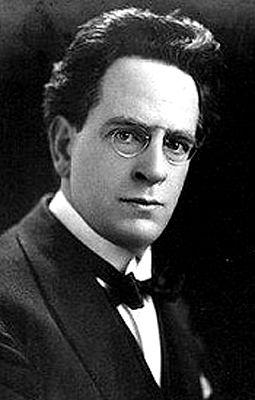
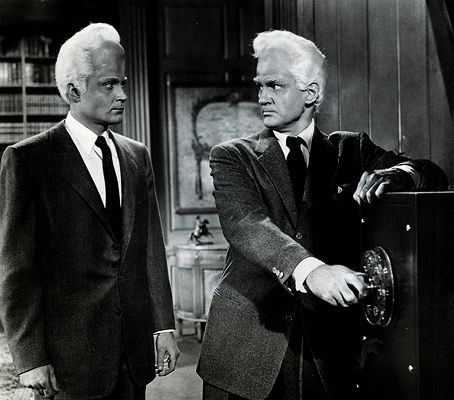
John Foulds and other visitors from Metaluna IV.
Source: Dutton Epoch CD (My rip!)
Formats: FLAC (RAR), DDD Stereo, mp3(320)
File Sizes: 310 MB / 180 MB
Download Link – [Add to my reputation and send me a PM requesting the FLAC link!]
mp3 version – https://mega.nz/#!ltAWHD7a!3IaywIRDJh1YtDzTPeA6pDdOvARI3QMicAqnm1SEjZI
Enjoy! Don’t share! Buy the original! Click on "Reputation" button if you downloaded this album! 🙂
Modern: Tonal
More world premiere symphony recordings for Havergal Brian fans! In this programme,
Martyn Brabbins and the Royal Scottish National Orchestra continue their Havergal Brian
series for Dutton Epoch with one of Brian’s most delightful scores, Wine of Summer, the fifth
symphony of 1937. The eloquent baritone soloist is Roderick Williams, the orchestral detail
beautifully realised in Dutton Epoch’s recording. Brian’s two more powerful later symphonies,
No.19 (1961) and No.27 (1966-67), make a striking, even heroic contrast, while the
ebullient and tuneful Festal Dance of 1908 completes the programme and receives an irrepressible
reading.
Music Composed by Havergal Brian
Played by the Royal Scottish National Orchestra
With Roderick Williams (baritone)
Conducted by Martyn Brabbins
"The third in Dutton???s series devoted to Havergal Brian begins in the paddling pool with the
compact gusto of the 1908 Festal Dance, remnant of his withdrawn Fantastic Symphony.
Then we???re plunged into the wild rough seas of a British composer who manages to fascinate
and baffle at exactly the same time. Symphonies Nos 19 and 27, from the 1960s, share the
terse, kaleidoscopic textures typical of Brian in extreme old age. Martyn Brabbins and his
Scottish forces pounce on every glinting detail and quirk, through flute meanderings,
punctured marches and beatific visions to the xylophone???s skeleton dance.
There???s a suitably liquid flow about the 1937 Wine of Summer, Brian???s verdant if eccentric
setting of a woozy poem from the 1890s by Oscar Wilde???s beloved, Lord Alfred Douglas.
Roderick Williams squeezes every lyrical drop from the sometimes arid vocal line, though
it???s the orchestral details that grab the ear as the poet lies in his midsummer wood,
contemplating bees, brier roses, and old loves that used to burn ???like fierce red kings???.
Fruity stuff."
BBC Music Magazine
Source: Dutton Epoch CD (My rip!)
Formats: FLAC (RAR), DDD Stereo, mp3(320)
File Sizes: 316 MB / 159 MB (FLAC version incl. covers & booklet)
Download Link – [Add to my reputation and send me a PM requesting the FLAC link!]
mp3 version – https://mega.nz/#!twJnhSRD!LzMQCI8xbIY3VAvm_fGPeZKcgDwoOx3V0Ce0StwLKK8
Enjoy! Don’t share! Buy the original! Click on "Reputation" button if you downloaded this album! 🙂
Romantic
These two Russian symphonies come from a time when Tchaikovsky was still role model No.1,
Myaskovsky had yet to appear and the young Rachmaninov and Scriabin were the new front-
runners. Each work is open to charges of epigonism, yet each is a valuable document.
Felix Blumenfeld (1863-1931) was one of a long line of Russian symphonists known as both
a pianist and a teacher. Information about his only Symphony is scant, with even its date uncertain
(there was a first performance in 1907). Malcolm MacDonald???s booklet-note speculates that it may
have been written in commemoration of casualties in the 1905 Revolution. Even without the subtitle
to guide us, and even before the slow finale, the piece has a strongly elegiac tone. The finale itself
is shorter and rather more perfunctory than that of Tchaikovsky???s Path???tique but is surely modelled
on it ??? Bruch???s Violin Concerto is also referenced melodically.
Georgy Catoire???s (1861-1921) Symphony is an even greater rarity. It was composed
piecemeal over a number of years from around 1889 and may never have received a complete premiere
in the composer???s lifetime (here MacDonald???s sources are queried by Anna Zassimova???s recently publishe
d monograph on the composer).
Music by F???lix Blumenfeld & Georgy Catoire
Played by the Royal Scottish National Orchestra
Conducted by Martin Yates
"This Blumenfeld Symphony is in four movements and takes us through noticeably a Tchaikovskian
Manfred-like gloom shot through with Elgarian nobilmente. The Larghetto is touchingly and even
yearningly elegiac. The Allegro con fuoco comes third with yet more Tchaikovskian DNA in baggage
somewhere between Hamlet and the grander balletic apotheoses. The Largo epilogue has about
it something of the glistening starlight of the equivalent moments in Elgar???s Second Symphony.
This movement rises to an extended, slowly-unfolding climax at 3:00. The music also reminded
me of an overtly Tchaikovskian symphony: the Danish composer, Louis Glass???s Fifth. Both the
Glass and the Blumenfeld are well worth hearing.
There has been much more Catoire on disc. His name might be distantly familiar to you, probably
because his music was championed by Oistrakh and has appeared in various places including
on Brilliant Classics, Hyperion and Aliud. In 2008 I was completely captivated by his two violin
sonatas on Avie and that disc was one of my Recordings of the Year. Those two sonatas will
appeal to all who enjoy the Medtner violin sonatas. Catoire knew Tchaikovsky and may be
counted a disciple of the master. He also had that adept miniaturist, Liadov as a teacher at
the Moscow Conservatoire, where Catoire was later to be a professor to many of the next
generation, including Kabalevsky.
The Catoire Symphony is fragrantly Russian; more in the line of Balakirev, Borodin and then
Glazunov. The big Allegro moderato first movement alternates Slavonic gloom with engagingly
lilting woodwind ideas, as at 2:33. The Allegretto is delightfully chipper and is followed by a
pensive Andante non tanto which touches hands with Blumenfeld???s completely understandable
infatuation with Tchaikovsky???s Manfred. There???s even a French horn solo that is reminiscent
of a similar episode in Tchaikovsky???s Fifth – if not quite as extended. Catoire???s Glazunov
credentials and sympathies are on his sleeve at the start of the cheery and sometimes
bubbly Allegro moderato ma con spirito finale. Soon he has us thinking of Rimsky???s
Antar – not a bad model. The final pages are a shade dutiful but we are sure to like
where the music is going and how it gets there."
Musicweb
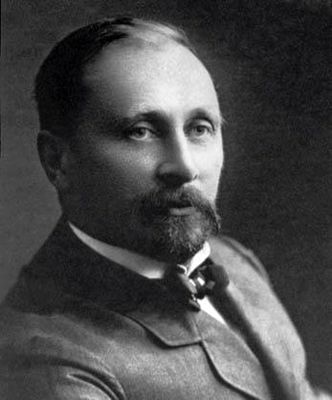
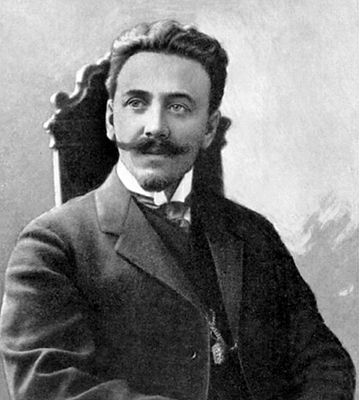
Georgy Catoire, F???lix Blumenfeld.
Source: Dutton Epoch CD (My rip!)
Formats: FLAC (RAR), DDD Stereo, mp3(320)
File Sizes: 341 MB / 201 MB (FLAC version incl. covers & booklet)
Download Link – [Add to my reputation and send me a PM requesting the FLAC link!]
mp3 version – https://mega.nz/#!JpoH3I5A!fmanjBtziNU0PwHB4HhCa8uljbAVKGlTRNTbCbCQ2_Q
Enjoy! Don’t share! Buy the original! Click on "Reputation" button if you downloaded this album! 🙂
———- Post added at 01:35 PM ———- Previous post was at 01:35 PM ———-
Love these Dutton Epoch CD uploads: thanks for sharing!
Almost done. 🙂
Modern: Tonal
Unlike many contemporary composers, David Matthews has been much concerned
with working in the great, inherited forms of the past ??? symphony, string quartet,
oratorio ??? and finding new ways of renewing them. In a similar spirit, he has
never shied away from tonality, from a musical language that is clear and direct,
and from a joyous spirit of dance; ???If only music could dance once again!??? he
reflected upon listening to Monteverdi???s Vespers. This is the work that inspired
his own Vespers, a grand oratorio masterfully combining a sense of solemnity
and exhilaration, and which makes an important addition to the great tradition
of amateur choral music. The same feeling of boisterous energy is felt in Matthews???
seventh, and most recent, symphony. Once again, Matthews is unafraid of
connections with great composers of the past and the model of Sibelius???s Seventh
Symphony ??? a one-movement work that subtly transitions from slow to fast and
back again ??? provides a template from which Matthews creates a piece of exquisitely
scored beauty and richness.
Music Composed by David Matthews
Played by the Bournemouth Symphony Orchestra
With Katie Bray (mezzo-soprano) & Matthew Long (tenor)
And The Bach Choir
Conducted by John Carewe & David Lee
"This world-premiere recording, which came out earlier in the summer, confirms David Matthews (b.1943)
as a natural composer for voices ??? here, the full-bodied, occasionally untamed Bach Choir ??? as well as a
richly gifted orchestral colourist happy to find invention in tonality and tradition. The Vespers, religious
in impulse rather than doctrine, use Latin texts with grand orchestral eruptions and explosions, ethereal
choral writing and implicit reference (described by Matthews in a note to the piece) to Hindu tradition as
well as Christian. Three poems by Rilke, that most spiritual of poets, are sung in English by soloists and
interspersed. The Symphony No 7 (2008-9), with its beguiling opening viola theme, is full of climactic,
thundering event and a lyricism Vaughan Williams or Sibelius might have envied."
The Guardian
Source: Dutton Epoch CD (My rip!)
Formats: FLAC (RAR), DDD Stereo, mp3(320)
File Sizes: 353 MB / 211 MB (FLAC version incl. covers & booklet)
Download Link – [Add to my reputation and send me a PM requesting the FLAC link!]
mp3 version – https://mega.nz/#!BxoVnQJS!4pCPLGBt4FqTbmARAM0Y79ua_zRZa6ftGS0mzMG_lLg
Enjoy! Don’t share! Buy the original! Click on "Reputation" button if you downloaded this album! 🙂
🙂 🙂 🙂 🙂
Many thanks, dear wimpel69 !!!
This is a FANTASTIC collection of GREAT british works (even if not very well known… ) !!!
All the BEST !!!
This is just like Christmas and Birthday on 1 day ..
WOW ..just WOW ..Thank you for your work and patience..
and I promise ..next request will be smaller … MUCH smaller 🙂 …
Have a nice weekend and thank you again!!!
Modern: Neon-Romantic/Tonal
Dutton Epoch explores unrecorded Arnold Bax! The strings of the Royal Liverpool Philharmonic
create a powerful impression in the Variations on the name Gabriel Faur??? and the early Symphonic Serenade.
These two tuneful works for strings are a delightful addition to the canon of recorded Bax. They are coupled with
Richard Arnell???s Classical Variations Op.1 ??? an essential footnote to the symphonies and a must for all collecting
the Dutton Epoch Arnell series. The CD is completed by Stephen Dodgson???s delightful Essay No.7 for orchestra,
and a fascinating discovery ??? conductor Norman Del Mar???s bold one movement Allegro Concertante for horn
and strings. This muscular concerto-movement, brilliantly played by Stephen Bell, was written by a professional
horn player, but with his friend Dennis Brain very much in mind.
Music by [see above]
Played by the Royal Liverpool Philharmonic & BBC Concert Orchestras
With Stephen Bell (horn)
Conducted by Martin Yates
"For some listeners, the title English Music for Strings will evoke memories of John Barbirolli’s
spectacular 1966 EMI disc featuring works by Edward Elgar and Ralph Vaughan Williams. Though
this 2010 Dutton disc of the same title, featuring Martin Yates, also includes English music for
strings, the composers range from the much less familiar Arnold Bax to the nearly unknown
Stephen Dodgson, Richard Arnell, and Norman del Mar. None of these works can hold a candle
to Elgar’s Introduction and Allegro or Vaughan Williams’ Thomas Tallis Fantasia, but they are all
still fine and attractive works, particularly Arnell’s beautifully proportioned and lovingly lyrical
Classical Variations in C for strings. And while Martin Yates is no John Barbirolli — the
extraordinary tonal sweetness that the older conductor was able to get from strings is not
present here — he is a technically accomplished conductor with an obvious enthusiasm
for the repertoire, and the Royal Liverpool Philharmonic’s strings play with a ravishing
tone and depth of dedication. Though not for everyone, this disc will likely please English
music fans, especially in Dutton’s clean but atmospheric digital sound."
All Music
Source: Dutton Epoch CD (My rip!)
Formats: FLAC (RAR), DDD Stereo, mp3(320)
File Sizes: 338 MB / 182 MB (FLAC version incl. covers & booklet)
Download Link – [Add to my reputation and send me a PM requesting the FLAC link!]
mp3 version – https://mega.nz/#!RgJiVIwJ!yu4PGoDuyPVEaYrCAOlKxHKI8XAWry9IkFIChR66uLY
Enjoy! Don’t share! Buy the original! Click on "Reputation" button if you downloaded this album! 🙂
This posting concludes my survey of Dutton Epoch albums.
Endless thanks wimpel69.
http://www.millan.net/minimations/smileys/imoksmiley.gif
Modern: Neo-Romantic
By the time his eagerly-awaited First Symphony appeared in 1950, Alan Rawsthorne had already
established a singular voice with his Symphonic Studies, the Concerto for String Orchestra, the
First Piano Concerto and the First Violin Concerto. The First Symphony is an energetic,
inventive and superbly scored work. The Second Symphony, ???A Pastoral Symphony???, is no programme
piece but rather a general expression of the pleasures of life in the country, even if, beneath the surface of the
music harsher, melancholy undertones can be sensed. The Third Symphony, returns to the turbulence
of the First Symphony, now tempered by the subtle colouration and gentler expression of the Second.
At its heart lies the haunting Sarabande slow movement, one of Rawsthorne???s finest creations.
Music Composed by Alan Rawsthorne
Played by the London Philharmonic & BBC Symphony Orchestras
With Tracey Chadwell (soprano)
Conducted by John Pritchard, Nicholas Braithwaite & Norman Del Mar
"What a valuable and rewarding release! Dedicated Anglophiles will recall that Sir John Pritchard???s
account of Rawsthorne???s First Symphony originally appeared in harness with a vivid reading of the
superbly inventive Symphonic Studies (perhaps this composer???s masterpiece), whilst Norman Del
Mar???s version of the Third was paired with a stunning rendering of Roberto Gerhard???s exhilarating
Concerto for Orchestra (I must confess I have always treasured my copy of the Argo LP featuring
this latter coupling). Both these vintage recordings (made in Kingsway Hall and dating from 1975
and 1967 respectively) have come up as fresh as new paint in Simon Gibson???s admirable transfers ???
turn up the volume just a little and the Third Symphony in particular sounds astonishingly fresh
nearly 30 years on. The Second Symphony, entrusted to the London Philharmonic under Lyrita
stalwart Nicholas Braithwaite, is a brand new digital recording from August 1993, supervised by
the expert team of producer Andrew Keener and sound engineer Mark Vigars.
Rawsthorne???s three symphonies form a powerful triptych. The First (1950) impresses with its
urgency and polish. It is a substantial utterance, turbulent and serene by turns, rich in strong
ideas, and passionately essayed here by Pritchard and the LPO. The Second, of nine years later
(A Pastoral Symphony) inhabits an altogether more relaxed and delicate landscape than its
moody predecessor, yet with no diminution in terms of concentration or proportional elegance.
In the Andante finale, Rawsthorne incorporates a radiant setting (pleasingly delivered on this
occasion by soprano Tracey Chadwell) of a poem in praise of summer by Henry Howard,
Earl of Surrey (1516-47): it exhibits a grace and gentle melancholy which are entirely
characteristic of its creator. Braithwaite and the London Philharmonic have the measure
of this likeable score, and the Watford Town Hall sound is full and airy to match. Del Mar
and the BBC SO prove themselves to be no less eloquent protagonists of the Third
Symphony (1964). This is at once the darkest, most extended and profound of the three.
Ambitious in scope and evincing a fastidious craftsmanship, its emotional kernel comprises
the second movement ???Alla Sarabanda???, a noble, deeply felt processional, which contains
some of Rawsthorne???s most intense, anguished inspiration.
Let???s hope that this useful issue signals the reappearance on CD of other British Council-
sponsored recordings from this source (how about a new lease of life for Del Mar???s very
fine Argo version of Nicholas Maw???s glorious Scenes and Arias ??? 10/69?). In the meantime,
however, a hearty welcome for another Lyrita winner.’"
Gramophone
Source: Lyrita Recorded Edition CD (My rip!)
Formats: FLAC (RAR), ADD Stereo, mp3(320)
File Sizes: 326 MB / 172 MB (FLAC version incl. covers & booklet)
Download Link – [Add to my reputation and send me a PM requesting the FLAC link!]
mp3 version – https://mega.nz/#!d5pVGYib!iXwXMQoe46vEEo1mbYkAJ-6G2s1qIM2v4GjPssUSm5U
/>
Enjoy! Don’t share! Buy the original! Click on "Reputation" button if you downloaded this album! 🙂
Modern: Neo-Classical
One decade an enfant terrible, the next decade a reactionary: isn’t that always the way? Take the
career of Constant Lambert. In the ’20s, Lambert was celebrated as the snappiest composer of
the postwar England, a position he unwillingly surrendered in the ’30s to more aggressively modernist
composers. These days, Lambert is remembered less for his once fashionable music and more for his
massively depressing Music Ho! — a book prophesizing the musical end of the world that neatly coincided
with Lambert’s own eclipse.
Lambert’s two ballets written for Diaghilev in the mid-’20s sound like first-rate conservative modernist
music. Romeo and Juliet and Pomona prove supple and charming neo-classical pastiches,
dancing with effortless elegance and singing with real lyricism when it’s called for. As a bonus, the disc
includes two more abstract examples of Lambert’s art: Music for Orchestra from 1927 and the
King Pest Rondo Burlesca, the final movement from his masterpiece Summer’s Last Will and
Testament from 1935-1936. The richly colorful and masterfully structured Music for Orchestra.
Music Composed by Constant Lambert
Played by the English Chamber, London Philharmonic & Royal Philharmonic Orchestras
Conducted by Norman Del Mar, Barry Wordsworth & Simon Joly
"Norman Del Mar’s effervescent pairing of Romeoand Juliet (1924-25) and Pomona (1926)
ranked high on many an enthusiast’s Lyrita wish-list and the first thing to say is that the 30-year-
old Kingsway Hall production leaps out of the speakers with startling bite and tangibility in its
silver-disc reincarnation. Although the intervening years have brought other rewarding versions
of these two delicious ballets, Del Mar’s vintage performances project with a tangy zest, charisma
and infectious rhythmic spring all their own. The ECO’s distinguished woodwind roster leave an
especially personable impression and both scores. The fill-ups (recorded in 1989 and 1993
but previously unreleased) are worth having too.
King Pest (a scary helter-skelter ride fairly grinning with malice) comes from Lambert’s
towering 1932-35 ‘masque’ Summer’s Last Will andTestament and Simon Joly’s spirited
realisation with the RPO makes an enjoyable pendant to the complete work. More valuable
still is the long-overdue revival of Music for Orchestra (completed in 1927, when Lambert
was still only 22). Barry Wordsworth and the LPO strain every sinew in what, amazingly,
appears to be this little masterpiece’s first stereo recording."
Gramophone
Source: Lyrita Recorded Edition CD (My rip!)
Formats: FLAC (RAR), DDD/ADD Stereo, mp3(320)
File Sizes: 311 MB / 165 MB (FLAC version incl. covers & booklet)
Download Link – [Add to my reputation and send me a PM requesting the FLAC link!]
mp3 version – https://mega.nz/#!l9ZXSQLJ!lnBfReOXEcKdbYAW7WYwlBo-IprNA4ERia-EYbDnLPQ
/>
Enjoy! Don’t share! Buy the original! Click on "Reputation" button if you downloaded this album! 🙂
Late/Neo-Romantic
Music by John Ireland & Frank Bridge
Played by the London Philharmonic Orchestra
Conducted by Sir Adrian Boult
"It’s amazing how good these forty year old analogue tapes sound. I am referring to the
Ireland items. The Bridge pieces are also analogue but from analogue’s G???tterd???mmerung
years just before DMM and digital-based LPs began a brief ascendancy and before the arrival
of the real silvery thing.
The Ireland is given a full-blooded performance with a gripping sound typical of Boult’s EMI
recordings of the Bliss Music for Strings and Howells Concerto for Strings for EMI Classics.
Concertino Pastorale is one of Ireland’s most touching works and this version has never
been surpassed for its sumptuous and elegiac tone. The string sound has no steel, only
silver, and an oaken attack. This is Ireland full of vitality and perhaps influenced by the
young Tippett’s Concerto for Double String Orchestra. It also has that resonance, vitality
and liveliness that will remind you of the Lyrita recording of Boult’s Moeran Sinfonietta.
The Holy Boy is a mite too pressed, as if Boult was determined to avoid any sentimentality
in this most sentimental of works.
The two movements from the Downland Suite receive a luminously eloquent recording.
The rocking Minuet with its redolence of Lavender Blue is superbly pointed and rhythmically
sprung while the Elegy flows with lilting charm. Such a shame that Ireland did not transcribe
the other two movements of the suite.
After the fine vintage sound of the Ireland tapes the Bridge items are just a shade warmer
and slightly softened in focus. Rosemary is warmly Delian and rises to a moment of
sumptuous ecstasy at 1:33 – most surprising in a work of only 3:26.
The four movement Suite suggests influences from Sibelius’s Rakastava and Tchaikovsky’s
Serenade for Strings. The scudding Intermezzo is a little charmer and cleanses the palate
for the Nocturne which looks forward to There is a willow and the slow movement of the
Moeran symphony. This strand continues in the most harmonically complex of the pieces
here ??? the touching Lament was written in memory of Catherine aged 9 drowned in the
Lusitania sinking.
Sally in our Alley is given a dry-eyed Elizabethan curve contrasting with its companion
the fly-away Cherry Ripe which has some of the wildness unleashed of Song of My Heart.
Any remaining cobwebs are blasted away by the delightfully intriguing and skirling
cross-currents of Sir Roger de Coverley."
Musicweb
Source: Lyrita Recorded Edition CD (My rip!)
Formats: FLAC (RAR), DDD/ADD Stereo, mp3(320)
File Sizes: 318 MB / 158 MB (FLAC version incl. covers & booklet)
Download Link – [Add to my reputation and send me a PM requesting the FLAC link!]
mp3 version – https://mega.nz/#!I55lBBpI!1kXl17swQWA7vIWKL3o4NQa7ePDD3cz_mLqMv3sM5Gw
Enjoy! Don’t share! Buy the original! Click on "Reputation" button if you downloaded this album! 🙂
Light Music
Fans of Eric Coates and Sir Adrian Boult are in for a field-day as Lyrita at long last restores to
currency the 87-year-old maestro???s much-loved 1976 concert with the New Philharmonia. When one turns
to Boult???s famous selection, it radiates a tingling spontaneity and beaming affection that are very special. For
evidence of a master at work, just listen to the way Boult caresses the glorious second subject in The Merrymakers;
and what vernal freshness and unruffled elegance he brings to the witty Three Bears fantasy and entrancing
Summer Days suite (a great favourite of Elgar???s, and whose fragrant centrepiece possesses a truly heady beauty).
The rest of the CD is filled out with seven treats from Lyrita???s 1978 ???Sir Adrian Boult conducts Marches??? anthology (SRCS71).
Grainger???s irresistible Over the Hills and Far Away in particular fairly bounds along with irrepressible vigour ???
as, for that matter, does Coates???s The Dam Busters ??? and Delius???s Marche-caprice has a captivating twinkle in its eye.
Music by Eric Coates & various composers [see below]
Played by the New Philharmonia and London Philharmonic Orchestras
Conducted by Sir Adrian Boult
"Of the Coates all but The Dam Busters are with the New Philharmonia. We start with a notably
vivacious Merrymakers Overture with some memorable work from the woodwind. Summer Days
is an early three part suite with a heavily Leh???r-indebted finale and an affecting saunter. In a
Country Lane, the first movement, is redolent of German followed by On the Edge of the Lake
which partakes on the one hand of a Graingerian sentimentality combined with a Grieg-Dvoř???k
innocence. We get two movements only from the three movement suite From Meadow to Mayfair.
In the Country is warm and gently swinging. Evening in Town has that busy-grand bustle so
typical of Coates in his London suite finales but shot through with the romance of the ballroom.
I am very partial to the Elizabeth of Glamis movement from The Three Elizabeths. For whatever
reason Boult chose to give us only the finale which includes one of Coates??? most whoozy
Toy Town style marches ??? OK there???s a sort of Elgarian trio but gorgeous trumpet playing
aside this is not one of Coates??? finest moments ??? for that I send you back in this collection
to The Merrymakers Overture. The Dam Busters march is done faithfully and with no
punches pulled. This is jaunty and crashingly heroic with brass calling out their hearts."
Musicweb
Source: Lyrita Recorded Edition CD (My rip!)
Formats: FLAC (RAR), ADD Stereo, mp3(320)
File Sizes: 341 MB / 141 MB (FLAC version incl. covers & booklet)
Download Link – [Add to my reputation and send me a PM requesting the FLAC link!]
mp3 version – https://mega.nz/#!JswQ3B4A!pJynf2MCaNscB_nTuWDpTtKF-gkvH361_SEzIphTfPg
/>
Enjoy! Don’t share! Buy the original! Click on "Reputation" button if you downloaded this album! 🙂
Modern: Neo-Romantic/Neo-Classical
The Symphony in G minor was the only completed symphony written by Ernest John Moeran.
He wrote it in 1934???37. It is in four movements. In 1926, the conductor of the Hall??? Orchestra, Sir Hamilton Harty,
commissioned a symphony from Moeran. He had already been working on a symphony since 1924, and the
premiere performance of the new work was announced for 4 March 1926. However, when it was almost finished,
he decided he was not satisfied with its structure and withdrew it. Over the next eight years he worked on
his revision of the piece, but in 1934 he abandoned his sketches and started again. He reused some earlier
material, but the work was substantially new. The symphony was finished on 24 January 1937, and dedicated
to Harty. Harty initially refused the dedication after he was overlooked as the conductor for the first performance
by now he was ill and had left the Hall??? Orchestra). The symphony’s first movement is a robust sonata form,
with a questioning harmonic structure.
The Sinfonietta, dedicated to Arthur Bliss, was composed largely in Radnorshire in 1944, both in the
studio Moeran made in the house at Kington which had been his father’s retirement home (until his death
in 1943) and during walks over the surrounding Welsh hills. This is a new-classical work in its scoring,
using only two horns, two trumpets and no trombones. The music especially in the outer movements,
is charged with tremendous rhythmic energy (a hint of Portsmouth Point at the start of the final Allegro?),
the sense of urgency being increased by a harmonic idiom which leans towards the bitonal. But the
lyrical Celtic strains of Moeran’s musical personality are never far away, (witness the rich, folklike
character of the second subject of the opening Allegro and the long melodic threads woven in the
variations of the second movement).
Overture for a Masque was commissioned by Walter Legge in 1943 for the Entertainments
National Service Association (ENSA), Moeran being one of several composers asked to write music
for performance at concerts for troops during the Second World War. It comes at a time when Moeran
was at a musical peak. Whether or not Moeran deliberately set out to invoke specifics images
memories or thoughts in the minds of his audience, most of whom would be fighting far away with
little chance of seeing home and their loved ones in the foreseeable future it’s difficult when
listening to the Overture not to associate almost all of the music with a mental progression of
images. There’s even a menacing central section which would perfectly fit a reel of Hitler at
his most menacing before the British boats, planes and troops march in to sort him out…
Music Composed by Ernest John Moeran
Played by the London Philharmonic and New Philharmonia Orchestras
Conducted by Sir Adrian Boult
"Probably no other country turned out such a bountiful crop of minor masters as England
in the first decades of the 20th century. E.J. Moeran was one of the best: his work is finely
crafted, melodically appealing, colorful, and effectively structured, and this is the disc to
own if you only have room in your collection for one sample of his output. The Symphony
in G minor in particular stands with the finest works of the period. Yes, the music is derivative:
of Vaughan Williams, Sibelius, and even Tchaikovsky (the start of the first movement’s
development section), but that doesn’t matter. It’s a terrific listen, and on balance Boult’s
is the finest performance of the work.
It has in abundance the qualities for which this conductor was rightly acclaimed: an
effortless feeling of movement, ideal clarity of texture, firm rhythms, and all of this with
none of the ensemble sloppiness that sometimes intruded on his interpretations.
The performance also features Lyrita sonics that remain a touchstone to this day in
terms of naturalness and impact. With by no means negligible couplings consisting of
equally successful versions of the Sinfonietta (a substantial piece with a particularly
imaginative central variation movement) and the Overture for a Masque, this disc is
a classic any way you look at it."
Classics Today http://i1164.photobucket.com/albums/q574/taliskerstorm/p10s10_zpsm61ert7v.gif
Source: Lyrita Recorded Edition CD (My rip!)
Formats: FLAC (RAR), ADD Stereo, mp3(320)
File Sizes: 369 MB / 179 MB (FLAC version incl. covers & booklet)
Download Link – [Add to my reputation and send me a PM requesting the FLAC link!]
mp3 version – https://mega.nz/#!1h4XFBJJ!FdB6aDBDWnJ0Eey7Tun-lImJk6iwM7AxOvWn9I6FdU0
/>
Enjoy! Don’t share! Buy the original! Click on "Reputation" button if you downloaded this album! 🙂
———- Post added at 12:34 PM ———- Previous post was at 11:38 AM ———-
No.981
British Light Music
Taken one work at a time, the five works on this disc entitled "Box of Delights", a collection of British light music,
are utterly charming. One might try Phyllis Tate’s jazzy, atmospheric London Fields from 1958, with
its delirious xylophone solo in the second movement, or Samuel Coleridge-Taylor’s slinky, slippery Valse
de la reine, the third of Four Characteristic Waltzes from 1898, and his sweetly seductive Andante
and Andante molto from Three-fours Valse Suite from 1899, or Granville Bantock’s Tchaikovsky
pastiche Russian Scenes from 1898 with its blustery "Cossack Dance", or Cecil Armstrong Gibbs’
Fancy Dress dance suite from 1935 with its soulful "Dusk (Waltz)", or Elisabeth Lutyens’ evocatively
colorful En Voyage suite for full orchestra from 1944 with its slyly sensual "Yvette (La Dieppeoise)" – but
unless you’re up to date with the dentist, more than one may be more than enough.
Music by [see above]
Played by the London and Royal Philharmonic Orchestras
Conducted by Barry Wordsworth & Simon Joly
"Amidst the excited flurry of the monthly Top Gun Lyrita releases comes this gentler morsel.
But just because it???s not Boult???s Elgar Symphonies or the Coleridge-Taylor Violin Concerto or
the George Lloyds or ??? well, whatever else it???s not, that doesn???t mean you should pass by.
Here we have a quintet of composers and plenty of relaxed enjoyment. It also qualifies as a
Light Music offering, as the disc???s subtitle makes clear, and given the prodigious number of
genre releases recently that???s no bad thing either.
Nothing over-serious here ??? just charming fare all round, finely played and conducted.
Try Leaper for another take on Bantock but otherwise banish humdrum days with this
delightful collection."
Musicweb
Source: Lyrita Recorded Edition CD (My rip!)
Formats: FLAC (RAR), DDD Stereo, mp3(320)
File Sizes: 327 MB / 196 MB (FLAC version incl. covers & booklet)
Download Link – [Add to my reputation and send me a PM requesting the FLAC link!]
mp3 version – https://mega.nz/#!o9gAGD6A!JMSuW97AWY7c2pA4voGfNDRgGe-5Z1HAOSpktYsjOXA
/>
Enjoy! Don’t share! Buy the original! Click on "Reputation" button if you downloaded this album! 🙂
Modern: Tonal
To what shall we compare the orchestral music of English composer Geoffrey Bush (1920-1998)?
Shall we compare it to the individualistic modernism of John Ireland, his teacher, mentor, and friend? Shall
we compare it to the romantic modernism of William Walton, his senior by almost a generation but his
exemplar in form and technique? Shall we compare it more specifically to the music of American neo-
Romantic Samuel Barber, whose School for Scandal Overture stands as the model for Bush’s
breezy Yorick Overture; or to the music of Soviet social realist Sergey Prokofiev, whose Third
Piano Concerto provided the material for the rushing climaxes of Bush’s brilliant First Symphony;
or to the music of the Czech-French-American internationalist Bohuslav Martinu, whose Sixth Symphony
provided some of the material for the buzzing climax of Bush’s colorful Second Symphony?
Or shall we instead take Bush on his own terms like the three conductors and four orchestras on this
1995 Lyrita disc dedicated to his music? Let’s. Taken on its own terms, Bush’s music could be
described as conservative English modernism, as music full of memorable themes, driving rhythms,
brilliant orchestrations, and, above all, cogent and compelling structures.
Music Composed by Geoffrey Bush
Played by the London Philharmonic and New Philharmonia Orchestras
And the London Symphony and Royal Philharmonic Orchestras
Conducted by Vernon Handley, Nicholas Braithwaite & Barry Wordsworth
"The Overture, Yorick is actually a well-balanced and quite nuanced piece. It is roughly divided
into three parts, the outer sections ???with the customary statement, development and
recapitulation of two themes??? paints a portrait of the hilarious side of Tommy Handley???s
nature. However, the lovely wistful middle section is perhaps a funeral elegy for the
departed comic. There is no doubt that Bush nods to Prokofiev in this work ??? including
an allusion to Peter and the Wolf.
I have not heard the Music for Orchestra before, so I rely on Geoffrey Bush???s own commentary
on this work for most of my information. In 1967 the piece was commissioned for the Shropshire
Schools Symphony Orchestra; which still appears to be going strong, although with a new
name. The composer specifies two aims that he had in mind for this piece. The first was to
write a work that presented a ???fully worked out musical argument ??? a miniature symphony
in fact.??? His second was to write ???a showpiece for orchestra which would give solo opportunities
to the leaders of each instrumental group.???
This Symphony No. 1 took over two years to compose. Bush writes that it was ???a slow
and laborious process.??? Much time was spent writing and rewriting the music before he
felt it was complete. Ironically he finished the work just 12 hours before the birth of his
son ??? so no doubt he was free to do the chores round the house and look after mother
and child!
The First Symphony resides in a totally different sound-world to that of the earlier Yorick
Overture. Yet as a contemporary reviewer remarked, ???[It is] a sane work that refrained
from making heavy weather with modern anxieties.???
I must confess that I not so sure of what to make of the Second Symphony ??? The Guildford.
The history of this work is that it was commissioned as a part of the 700th anniversary of
the granting of a Royal Charter to the city of Guildford. It was first performed in November
1957 by the Guildford Municipal Orchestra with the composer on the rostrum. I was
unable to find any contemporary reviews of this work so I am not sure what the audience
and the pundits made of it. However it did not regularly appear at symphonic concerts
over the years and was not broadcast until the late nineteen-eighties."
Musicweb
Source: Lyrita Recorded Edition CD (My rip!)
Formats: FLAC (RAR), ADD Stereo, mp3(320)
File Sizes: 367 MB / 181 MB (FLAC version incl. covers & booklet)
Download Link – [Add to my reputation and send me a PM requesting the FLAC link!]
mp3 version – https://mega.nz/#!thJBSaSJ!dFaWZ2hlwb2wJHlYmMl7ZeSz3VBb5gPKIXQxhjBTWho
Enjoy! Don’t share! Buy the original! Click on "Reputation" button if you downloaded this album! 🙂
Modern: Neo-Romantic
Of the English modernist composers who came of age after the First World War, Arthur Bliss
has been less well served on record than he deserves. His major works — Morning Heroes, A Colour
Symphony, and the four great ballets — have received few recordings. Even Bliss’ warmly lyrical
and instantly appealing Music for Strings has had few recordings. The Meditation on a
Theme by John Blow contains some of Bliss’ most varied and rhythmically bracing music.
The final work here is A Prayer for the Infant Jesus in the only recording yet made at the
time of release, by Philip Ledger and the Ambrosian Singers. Scored for women’s
voices, the work is starkly beautiful and Ledger and the English choir deliver a wonderfully moving
performance that could win Bliss new advocates among the English cathedral set.
Music Composed by Sir Arthur Bliss
Played by City of Birmingham Symphony Orchestra
With the Ambrosian Singers
Conducted by Hugo Rignold & Philip Ledger
"The three movement Music for Strings is generally a dark and serious score with dense
textures that are brought out superbly by the CBSO…in the closing movement the
CBSO manage to discover an innate sense of mystery that at times borders on the
sinister. Bliss???s attractive Meditations reminded me of the dramatic and opulent sound
world of Ravel???s Daphnis et Chloe. The Finale has an impressive heroic central section
that could easily serve as the conclusion to a great symphony. The quality of the
performances and excellent sound make this Lyrita disc a most attractive proposition."
Musicweb
Source: Lyrita Recorded Edition CD (My rip!)
Formats: FLAC (RAR), ADD Stereo, mp3(320)
File Sizes: 326 MB / 151 MB (FLAC version incl. covers & booklet)
Download Link – [Add to my reputation and send me a PM requesting the FLAC link!]
mp3 version – https://mega.nz/#!Q4pRCIyL!lcwKkmH5ylGrsIFamIPPXMsO108Csj-dVzc8OR_TIrA
/>
Enjoy! Don’t share! Buy the original! Click on "Reputation" button if you downloaded this album! 🙂
Modern: Neo-Classical
Equally likely to please knowledgeable fans of English orchestral music and those who know only
"Greensleeves" and "Land of Hope and Glory", this collection of divertimentos and sinfoniettas by
English modernists is a sure-fire winner. There is a surprising range of musical variety: Tippett’s
Divertimento is supple and sinewy, while Rawsthorne’s is lighter in sound, but tougher in
aesthetic; Britten’s Sinfonietta has a sly irony that contrasts with Berkeley’s straightforward
sincerity and Arnold’s lightheartedness. In Arnold’s Sinfonietta, the London Philharmonic under
Braithwaite sounds much perkier than usual, and one gets the sense they are thoroughly enjoying
This disc is an outstanding addition to the English discography.
Music by [see above]
Played by the English Chamber and London Philharmonic Orchestras
Conducted by Norman Del Mar & Nicholas Braithwaite
"I am not sure that Tippett’s Divertimento has ever sounded as bright-eyed and eager.
This is the most vibrant-sounding clamorous recording it has had. Norman Del Mar was a
magnificent conductor and a long-time collaborator with Lyrita – note his 1965 recording of
Bax 6 which was reissued last month [review]. As for Tippett???s music it is here given to uproar,
resilience and poetry. You might link the first and third movements with the bustle of Moeran’s
Sinfonietta. The fourth of the five movements has some typically sprung Tippett cross-rhythms
as well as a certain weightiness. The finale likewise demonstrates clamorous rhythmic vitality.
After the gloriously grating cross-cut of Tippett Rawsthorne’s slightly vinegary lyrical melancholy
makes for a distinctive style change. There’s no mistaking the Rawsthorne voice. After a
haunted little Lullaby comes a flickering and bustling-busy jig. The whole thing is over in the
span of a typical concert overture. It was written for and dedicated to Harry Blech who
premiered it with his London Mozart Players.
Then come three sinfoniettas. The Britten is from 1932 and is dedicated to his teacher, Frank
Bridge. It’s a densely inventive piece which bristles with imaginative strokes. I particularly
noted the chilliness as well as the English pastoral edge of the central Variations. The shiveringly
Sibelian Tarantella flies along lickety-split with Del Mar driving his orchestra in sprint mode.
This is not quite the mature Britten but it is fascinating.
Berkeley’s Sinfonietta is from 1950. It is in two movements of which the first is typically
springy, lithe and boisterous rather like the Serenade. Only in the combined Lento allegro
is the mood more ambivalent and ultimately haunted before a racy flightiness links the
listener back to Tippett. This brings the proceedings to an end but not before a final gracious
sigh (7.37)
The final work is the Arnold First Sinfonietta – there are three all conveniently recorded on
EMI. It is the most approachable of the five works here although Nicholas Braithwaite is by
no means the most beguiling advocate of this beguiling music. While Arnold’s singing soul
is there the results could be even more lissom and even more fetching. The bracing allegro
con brio goes with a good swing."
Musicweb
Source: Lyrita Recorded Edition CD (My rip!)
Formats: FLAC (RAR), ADD Stereo, mp3(320)
File Sizes: 299 MB / 155 MB (FLAC version incl. covers & booklet)
Download Link – [Add to my reputation and send me a PM requesting the FLAC link!]
mp3 version – https://mega.nz/#!5gpQUbiS!Pb5tFkbUVjJnWY4y5uL97rdPRH_Vy3KKc2Te3FkFAmw
Enjoy! Don’t share! Buy the original! Click on "Reputation" button if you downloaded this album! 🙂
Modern: Tonal
Malcolm Williamson (1931-2003) was a multi-talented musician; he was not only a first-rate pianist ???
as he demonstrates in his playing of the Piano Sonata No.2 on this CD ??? and organist, but was also a
composer who was successful in writing for children, films, opera, orchestra, voice and chamber ensembles
in a number of styles. A troubled man, particularly towards the end of his life, he also got a reputation for
failing to deliver on time, mainly due to the late completion of a work as part of his duties as "Master of the
Queen???s Music(ke)".
Written in 1957 as a memorial to Gerald Finzi, the the Piano Sonata No.2 was commissioned by the
Cheltenham Festival Society and first performed in that year by Robin Harrison. It is a knotty work,
seemingly atonal at first acquaintance, and needs a good deal of effort by the listener to gain access
to the idiom Williamson chose to use. A tough work, it uses the full range of the keyboard. The first
movement is acerbic and runs into the second, a threnody. The short finale is fast and rhythmic,
tying up the ideas of the first two movements and ending with an outburst of joy. This recording first
appeared on an Argo LP devoted to British composers playing their own works for piano.
Championed to publishers by Sir Adrian Boult and Benjamin Britten, Williamson started getting
numerous commissions. Santiago de Espada on the theme of St James, patron saint of Spain,
was first performed by the London Philharmonic and Boult at a private concert in 1957. It is a very
accessible work, much in the shape of an overture by Walton, with a sweeping melody in the middle
section.
At the same concert the First Symphony was also aired. The title, "Elevamini", comes from
Psalm 24 and means ???Be ye lifted up???; the work was written as a result of the death of Williamson???s
grandmother, and, with its original ideas, is a remarkable achievement for the young composer.
The first movement concerns the alert to the arrival of a new soul to Heaven, brass chords
followed by a meandering melody picturing the soul???s migration. After a funeral march, the
brass chords reappear to announce the arrival. The second movement concerns the joy at
that event, alternating with a benediction-like motif, while the finale, the soul???s acceptance,
at the end dies away to infinity and everlasting life.
The Sinfonia Concertante also has three movements, each with a religious title, and was
originally to be Williamson???s second symphony. The first movement, ‘Gloria in excelsis Deo’,
begins forcefully with trumpet chords and a chant from the piano, becoming rhythmic and
energetic, led by the strings. ‘Salve Regina’ is written in the shape of an arch, most beautiful
in its moments of quiet contemplation. The finale, ‘Gloria Patri’, consists of a sparkling rondo,
followed by a lengthy epilogue which ties together earlier episodes before concluding with
hope and brio. Truly, this is a work crying out for more performances.
Music Composed by Malcolm Williamson
Played by the Royal Liverpool Philharmonic Orchestra
With Malcolm Williamson & Martin Jones (piano)
Conducted by Sir Charles Groves
"The opening Santiago de Espada Overture is a cracking example of its genre, combining
Waltonian ebullience and nobility within Williamson???s personal musical language. Its absence
from regular concert programmes is to be regretted.
The Symphony No. 1 (Elevamini) also dating from 1957 is much more serious fare. It was
written following the death of the composer???s grandmother and opens with a sequence of
grinding chords which recur at key moments throughout the work and which represent the
opening of the gates of New Jerusalem to admit new souls. This is followed by a long
threnody for strings alone, a passage that would not be out of place in a symphony by Karl
Amadeus Hartmann, before the second section of the movement is introduced by hushed
chords on horns and more restless flute figurations. This leads to a slow funeral march,
with sinister throbbing timpani underpinning the texture, building to a recurrence of the
grinding chords. The movement concludes serenely.
The central Allegretto movement that follows provides welcome rhythmic and textural
contrast. Paul Conway in his booklet notes finds a ???Coplandesque??? quality to the music
here. There is imaginative use of percussion, too, and a general lightness of approach
that is refreshing.
We are back to more serious stuff with the Finale. This contrasts slow moving passages,
including an insistent trumpet call, with faster, dancing figures and rhythmic timpani.
As the movement progresses the distinction between these lessens, and builds the tension
until the final reappearance of the grinding chords that opened the symphony. The work
ends with a quiet, long-held string chord.
As with his First Symphony, the inspiration behind Williamson???s Sinfonia Concertante is
again to be found in the composer???s deeply-held religious beliefs. All three movements of
the work have revealing titles. The opening movement (Gloria in excelsis Deo) is fast
moving and rhythmic and makes several references to the traditional Gloria chant. This is
followed by a contrasting slow movement (Salve Regina) and an ebullient Finale
(Gloria Patri) which features a prominent trumpet part. The threads of the music are
pulled together in a short epilogue."
Musicweb
Source: Lyrita Recorded Edition CD (My rip!)
Formats: FLAC (RAR), ADD Stereo, mp3(320)
File Sizes: 305 MB / 165 MB (FLAC version incl. covers & booklet)
Download Link – [Add to my reputation and send me a PM requesting the FLAC link!]
mp3 version – https://mega.nz/#!RwQxwJ7S!unH_z8RwCI5fpdfwdcYuF2kONfev9ts5MXteeuPudNw
Enjoy! Don’t share! Buy the original! Click on "Reputation" button if you downloaded this album! 🙂
Modern
Robert Still (1910-1971) is remembered partly through these Lyrita recordings of two of his
four symphonies. Born in London and educated at Eton and Trinity College, Oxford, Still continued his
education at the Royal College of Music where he was taught by, among others, Gordon Jacob. After a
short spell teaching at Eton College, he became conductor of Les Ballets Trois Arts Company; war service
saw his declining a commission and he soon went into the Royal Artillery travelling orchestra, where
colleagues included Manoug Parikian and Cecil Aronowitz. After the war, Still, comfortably off, devoted
himself to composition. The Third Symphony (1960) is thought to be his magnum opus; it was
dedicated to Sir Eugene Goossens who thought very highly of it. It was the last music Goossens
conducted before his death, which occurred less than a month after this recording was made. Still???s Third
Symphony is in three movements. The first grabs the attention with brass fanfares, wonderfully
produced by here the London Symphony Orchestra???s trumpets, horns and trombones. The second, slow,
movement conjures up visions of English rusticity, warmly directed by Goossens; the finale is energetic
and confident, again with much for the brass to do, ending with a big finish together.
The Fourth Symphony (1964) is in a single movement and resulted from Still???s other great
passion than racquet games, a deep interest in psychoanalysis. Inspired by the case history of a young
man presented to the Imago Society by Dr Charles Rycroft, the music describes his feelings of persecution
and the treatment. There is no programme as such, and the music is quite capable of standing on its
feet without resorting to this crutch. The score certainly has its internal battles, with ideas building
up and then being dissipated. Towards the end, the mood alters to one of resignation, the ending
dying to nothing after a couple quiet rolls on the timpani. Myer Fredman, who had become a friend
of the composer, conducted the concert premiere and this recording.
Humphrey Searle (1915-1982) also studied with Gordon Jacob, but it is the period when he
studied privately with Anton Webern in 1937-38 that had the most influence on his writing. After
working as a producer at the BBC from 1938 to 1948, Searle became in 1951 music advisor to Sadler???s
Wells Ballet, taught at the Royal College of Music and was an energetic member of both the Society for
the Promotion of New Music and the Composers??? Guild.
The Second Symphony was born in tragic times; begun in 1956 and completed in March 1958
the work is dedicated to his first wife, Lesley, who had died of cancer on Christmas Day 1957. In the
opening Maestoso, the 12-note series is presented for the first time, and the first movement proper
develops into a somewhat ill-at-ease urgency. A more relaxed second subject provides contrast to this,
and the two ideas work together very successfully. The slow movement evokes night music, celesta
and high strings accompanying the birdcalls made by the wind soloists. The finale follows without a
break, reintroducing material from the first, but is developed towards a confident and forceful
conclusion.
Music by Robert Still & Humphrey Searle
Played by the London Symphony, Royal Philharmonic and London Philharmonic Orchestras
Conducted by Sir Eugene Goossens, Myer Fredman & Josef Krips
"Encountering Humphrey Searle???s music is like stumbling across a Wyndham Lewis
painting in a British art gallery among all those twee idylls: art with its ears turned
to tomorrow. But his Second Symphony catches Searle during an awkward moment of
transition. He had yet to reconcile serial composition with his desire to compose symphonies.
Searle had studied 12-tone composition with Anton Webern, but in the 1950s writing
symphonies is what weighty, significant British composers felt they ought to be doing, I guess.
The dilemma: serialism opens channels into structural labyrinths that are alien to traditional
symphonic rhetoric. Searle???s masterful Third, Fourth and Fifth symphonies solved that
undermining problem by gradually pushing conventional form to the margins, defining
a structure specific to each work. The Second attempts to graft serial workings-out onto
the contours of tonal music. Some of the material is magnificent. The harmonic spectrum
outlined in the opening moments is rich in possibility. The pacy finale touches harmonic
ecstasy. But Searle???s dogged determination to make this a symphony ??? contrived recapitulations,
strangely incongruous cadences and second-hand gesturing ??? suffocates the open-ended potential
of his material.
Alun Francis???s 1995 performance (CPO) was a workmanlike and slick but Joseph Krips and
a well drilled LPO in 1973 offer something more soulful. The two symphonies by Eton music
master Robert Still are core Lyrita territory but it???s dispiriting to find a composer seriously
peddling stuffy cod-Elgar in 1960 and ???64. Hearing these works confirms that Eton???s greatest
musical legacy is another Humphrey: Lyttelton."
Gramophone
Source: Lyrita Recorded Edition CD (My rip!)
Formats: FLAC (RAR), ADD Stereo, mp3(320)
File Sizes: 358 MB / 157 MB (FLAC version incl. covers & booklet)
Download Link – [Add to my reputation and send me a PM requesting the FLAC link!]
mp3 version – https://mega.nz/#!lpBxTAbJ!vir1zJ6PhdQsrmRxqB-pTp_oz7u7UXlmyM0lOOCSXKs
/>
Enjoy! Don’t share! Buy the original! Click on "Reputation" button if you downloaded this album! 🙂
———- Post added at 01:14 PM ———- Previous post was at 12:16 PM ———-
No.987
Modern: Neo-Classical/Neo-Romantic
On this Lyrita disc at least, Elizabeth Maconchy comes off like a genuinely great composer.
The supple strength of her Overture, Proud Thames from 1952, the rugged integrity of her Symphony
for Double String Orchestra from 1953, the lyrical austerity of her Serenata Concertante for Violin
and Orchestra from 1962, and especially the sublime objectivity of her late Music for Strings from
1983 all speak with a highly articulate and deeply individualistic voice that sounds nothing like her teacher
Vaughan Williams and even less like any other English composer. Indeed, every work here sounds like
nothing so much as great music – superbly crafted, seriously considered, intensely expressive, and
passionate. This disc is an excellent introduction to the composer.
For another album by Elizabeth Maconchy, see No.329 (Thread 121898).
Music Composed by Elizabeth Maconchy
Played by the London Symphony and London Philharmonic Orchestras
With Manoug Parikian (violin)
Conducted by Vernon Handley & Barry Wordsworth
"Elizabeth Maconchy received her most significant musical training in Prague, and she cites
Jan???cek and Bart???k as her strongest influences. You can hear hints of both composers in her
Symphony for Double String Orchestra (1953), particularly in the music???s tricky rhythms and
spicy harmonies. However, as the piece progresses, and especially in the last movement,
you can tell that Maconchy also studied her share of compatriot Benjamin Britten???s works.
The title Music for Strings (1983) would seem to indicate Bart???k as a prime model, and
indeed Maconchy so strongly emulates the Hungarian composer???s witty, acerbic style that
the piece sounds more like an homage than an original composition. However this in no
way diminishes our enjoyment of the music.
Finally, the symphonic poem Proud Thames, the first work on the disc, also is the earliest (1952),
even though it sounds to be of recent vintage. This is due to the quasi-minimalist repetition
toward the end, while the darkly playful interplay of brass and strings evoking the rushing
river recalls Libby Larsen???s Water Music Symphony. Proud Thames also is the freshest and
most engaging piece on the program. The performances are all excellent, with Vernon
Handley leading Proud Thames, the Symphony, and the Serenata with the London
Philharmonic and London Symphony, while Barry Wordsworth conducts the London
Philharmonic in Music for Strings. The recorded sound is up to Lyrita???s usual high standard."
Classics Today
Source: Lyrita Recorded Edition CD (My rip!)
Formats: FLAC (RAR), ADD Stereo, mp3(320)
File Sizes: 326 MB / 156 MB (FLAC version incl. covers & booklet)
Download Link – [Add to my reputation and send me a PM requesting the FLAC link!]
mp3 version – https://mega.nz/#!k0wgkYJA!0OCnFfvmDjlvC6BlpLr16XDCM7xgwuaXnc9t0sGQ_FA
Enjoy! Don’t share! Buy the original! Click on "Reputation" button if you downloaded this album! 🙂
Modern: Tonal
This Lyrita issue is a highly valuable addition to the English symphonic repertoire.
Havergal Brian’s Sinfonia Tragica dates from 1948, and is fact, a reworking of
the prelude to the projected opera, Deidre of the Sorrows. Scored for standard forces
plus a lot of percussion, it is a compressed and prophetic work set within a perfect three-in-one
design full of dramatic overtones. Symphony No.16 was written in 1960, and by this time
Brian’s language had become even more succinct and terse. The symphony runs for just under
18 minutes but the argument is never lacking in power and angst so reminiscent of the early
1960’s.
Following hard on the same label’s recording of Arnold Cooke’s First Symphony, is
this Third Symphony by the same composer. Although his melodic and harmonic idiom
shared plenty of characteristics with those of Hindemith, Cooke always favoured economy and
clarity and his dislike for great theatrical displays is always very evident, especially in his symphonic
output. This symphony has many arresting moments and is one of this composer’s finest works.
Music by Havergal Brian & Arnold Cooke
Played by the London Philharmonic Orchestra
Conducted by Nicholas Braithwaite & Myer Fredman
"Here again at last is the first fully professional recording of the music of Havergal Brian:
Myer Fredman and the London Philharmonic’s Lyrita coupling of his Sixth and Sixteenth symphonies.
When first released on LP in 1973, listeners did not know what to make of it. And who can blame
them? A prot???g???e of Elgar and contemporary of Vaughan Williams, Brian’s music sounds like
nothing else in English music, or in any other music, for that matter. Tonally oriented, Brian’s music
is relentlessly contrapuntal. Colossally scored, Brian’s music is interrupted by flashes of intense
silence. Dramatically motivated, Brian’s music is shattered by moments of total stasis. Though some
listeners found it uncompromising and incomprehensible, others found his Sixth as compelling a
work as had been composed in the genre since the death of Mahler and his Sixteenth as unique a
work as had ever been composed by anybody ever.
Reissued here on CD coupled with Nicholas Braithwaite’s recording of Arnold Cooke’s Third Symphony,
Fredman’s Brian performances still sound great. How he could possibly have known how Brian
goes is anyone’s guess, but go Brian’s music does in these performances. Fredman controls not
only the three movements in one form of the Sixth, but the six movements in one form of the
Sixteenth by keeping close watch on tempo relationships and by never losing concentration no
matter how convoluted the musical argument. With the London Philharmonic’s first-rate playing,
Fredman makes Brian’s music sound absolutely inevitable and completely convincing. Assuredly
not for everyone, those who do get Brian will find his music compulsive listening.
In context, Cooke’s Third comes off as much more conventional. A half-hour-long, three-movement
work with two fast Allegro movements enclosing an expansive Lento, Cooke’s Third recalls Hindemith
in its harmonic language and Walton in its rhetorical lyricism. But though more conventional,
Cooke’s work is still full of expressive themes, cogent forms, and persuasive forms, and Braithwaite
and the London Philharmonic do the Third justice. As was standard with Lyrita, the stereo sound
is clear, clean, cool, and colorful."
All Music
Source: Lyrita Recorded Edition CD (My rip!)
Formats: FLAC (RAR), ADD Stereo, mp3(320)
File Sizes: 308 MB / 138 MB (FLAC version incl. covers & booklet)
Download Link – [Add to my reputation and send me a PM requesting the FLAC link!]
mp3 version – https://mega.nz/#!ho4mlSLJ!MsRbAfpLr1CvUR1NqXhn4S3eUvGv3uUChW4QJOcICB8
Enjoy! Don’t share! Buy the original! Click on "Reputation" button if you downloaded this album! 🙂
Modern: Neo-Romantic/Impressionist
The slow movement of Arnold Bax’s Sixth Symphony, and perhaps also the bulk of the first
movement, had begun life as part of a Viola Sonata that Bax had started writing in 1933. He soon realised,
however, that the material was more suited to orchestral treatment, and the symphony was completed in Morar,
on the west coast of Scotland, on 10th February 1935. It was originally dedicated to the Polish composer Karol
Szymanowski, whom Bax had met in England, but his name is crossed through on the manuscript and replaced
by that of Adrian Boult.
The first movement opens with a prelude in which a repeated figure in the bass provides the accompaniment
to a march-like theme on horns and woodwind. The turbulent Allegro, which follows a series of grandiose chords,
is based on the preceding material and eventually gives way to a slower section with a new theme played by
three flutes in unison. The fast music resumes for a stormy development section, followed by a brief respite
before the movement rushes on in a whirlwind to its emphatic ending, like the slamming of a door. The slow
movement is founded on two contrasting ideas: an expressive melody first heard on strings, and then a soft
trumpet theme with a ???Scotch snap???, characteristic of Scottish folk-music. Development of this material culminates
in two march-like sections, the first harsh and baleful, the second a calm, stately procession leading to the
peaceful coda. The tripartite finale (Introduction, Scherzo and Trio, and Epilogue) is the only one among Bax???s
symphonies to open quietly. The solo clarinet???s sinuous melodic line, from which the movement grows, is
repeated by the strings, now with accompanying harmonies, before the woodwind announce a new theme of
a liturgical nature, very similar to the ???Sine Nomine??? melody in Vaughan Williams???s later Fifth Symphony.
At the end of the Introduction the pace gradually quickens, leading into the Scherzo, in which the opening
material is now transformed into a kind of symphonic jig full of nervous energy. Contrast is provided by a
slower section (the Trio), after which the Scherzo resumes its headlong course with an inflexibly rigid rhythm.
A strikingly dramatic moment occurs with the horns braying furiously and the strings above them singing
out a theme taken from Sibelius???s Tapiola, a work that had reduced Bax to tears when he first heard it. (The
two composers??? admiration was mutual: in acknowledging the dedication of Bax???s Fifth Symphony, Sibelius
called him ???one of the great men of our time???.) There is a tremendous climax, with the liturgical theme blared
out triumphantly by the brass, and this leads to the peaceful Epilogue, in which the clarinet???s enigmatic
opening music is transformed by the solo horn into something of exquisite beauty set against a backdrop
of rippling harp and divided strings. The musical texture becomes gradually sparer and the movement
fades slowly away, bringing to a close what some regard not only as Bax???s symphonic masterpiece but
as one of the finest symphonies from the twentieth century.
Music Composed by Arnold Bax
Played by the New Philharmonia & Royal Philharmonic Orchestras
Conducted by Norman Del Mar & Vernon Handley
"Here???s yet another valuable reissue from Lyrita???s vaults. Norman Del Mar???s pioneering 1966
account of Bax???s Sixth Symphony has held up extremely well. Occupying an interpretative
middle ground between the thrilling thrust and narrative coherence of Vernon Handley???s much-
praised recording (part of his Gramophone Award-winning Bax cycle for Chandos, 12/03) and
the colourfully expressive languor of Bryden Thomson???s, Del Mar may be the most satisfying of
the lot. Like Handley, Del Mar makes sense of the symphony???s unusual structure (the finale is
a fierce scherzo positioned between a dark introduction and elegiac epilogue) while allowing
one to savour more of the details. The result remains the most emotionally potent on disc.
Note, for instance, how warmly the New Philharmonia strings sing their opening cantilena
at the beginning of the slow movement. And although he is not as graceful as Handley, Del
Mar brings far more character and incident to the finale???s scherzo section.
The CD is rounded out with shorter works performed by Handley and the Royal Philharmonic,
including a succinctly passionate, though somewhat rough-edged, reading of the atmospheric
Irish Landscape (1913). The conductor???s recording of the Rogue???s Comedy Overture (1936),
on the above-mentioned Chandos set, is slightly more frisky than this one ??? but only slightly.
And while I would not place either the Overture to Adventure (1936) or the Overture:
Work in Progress (1943) in Bax???s top drawer, both are attractively vivacious and
dispatched with ???lan."
Gramophone
Source: Lyrita Recorded Edition CD (My rip!)
Formats: FLAC (RAR), ADD Stereo, mp3(320)
File Sizes: 326 MB / 173 MB (FLAC version incl. covers)
Download Link – [Add to my reputation and send me a PM requesting the FLAC link!]
mp3 version – https://mega.nz/#!Q0pFDaJL!H12DWtT7pj8XX9cUj9dRrhfWrZXbK4dfHgkKglAJgNY
Enjoy! Don’t share! Buy the original! Click on "Reputation" button if you downloaded this album! 🙂
Modern: Tonal
Arthur Benjamin (1893-1960) wrote the Jamaican Rumba – but don’t hold it against him.
Once one of the most instantly recognizable tunes in the British Commonwealth of Nations, the Rumba’s
extraordinary success quickly damned Benjamin in the eyes of critics who condemned even his serious
works as the product of a musical lightweight. This 2007 Lyrita release may go some way toward
redeeming Benjamin’s reputation. Although half the disc includes works that would have to be called light –
Overture to an Italian Comedy, Cotillon, A Suite of Dance Tunes, and especially the North American
Square Dance Suite – the other half features a work that would have to be called serious — the 45-minute,
four-movement Symphony (No.1 of 1). Always brilliantly scored, infectiously rhythmic, and instantly
attractive, Benjamin’s light works cannot help but raise a smile on all but the most hardened critical faces.
And with a sternness, a strength, and a concentration that nearly match the best contemporary English
works in the genre — Vaughan Williams’ Sixth and Alwyn’s and Tippett’s firsts — Benjamin’s
Symphony cannot help but impress all but his most incorrigible foes.
To film music fans, Arthur Benjamin will certainly be best remembered for the miniature cantata
The Storm Clouds that plays such a pivotal role in the finale of both versions of Alfred Hitchcock’s
"The Man Who Knew Too Much" (And no, Bernard Herrmann did not re-orchestrate it for the second).
Music Composed by Arthur Benjamin
Played by the London Symphony, London and Royal Philharmonic Orchestras
Conducted by Barry Wordsworth, Myer Fredman & Nicholas Braithwaite
"The disc of orchestral music by Arthur Benjamin (1893-1960) draws on two vinyl miscellanies
and also features two previously non-issued performances. As Calum MacDonald points out in his
extensive note, Benjamin suffered from his ongoing success as a composer of light music (not least
Jamaican Rumba) ??? to the extent that his concert works and operas never really established
themselves. The present issue gets the balance between ‘light’ and ‘serious’ right. It opens with
the sparkling Overture to an Italian Comedy (1936), incisively directed by Myer Fredman, and
continues with Cotillon, A Suite of English Dances (1938) that reveals Benjamin as the equal of
Respighi when it comes to presenting music from the past in an entertaining modern context.
Nicholas Braithwaite is fully responsive to its wit and whimsy, while Barry Wordsworth is equally
convincing in North American Square Dance Suite (1951) ??? a collection of ‘settler’ tunes that
contrasts such as the plaintive ‘He piped so Sweet’ and wistful ‘Calder Fair’ with livelier numbers
such as ‘Fill the Bowl’ and ‘The Old Punk’ (which prompts the thought that, as pictured on the
booklet cover, Benjamin bears an uncanny resemblance to the late Joe Strummer!). The most
substantial work here is the Symphony that Benjamin composed in the last months of the
Second World War and which enjoyed several outings between 1948 and 1954, only then
to languish until recent years. MacDonald reckons to the influence of Mahler as well as the
more expected one of Sibelius, but an even more potent model is surely the Fifth Symphony
of Prokofiev ??? completed and premiered just months earlier, whose presence is palpable in
the spaciously conceived and densely textured first movement (marked Largo-Allegro, though
the introduction is not marked off as such and the movement as a whole unfolds at a
decidedly moderate tempo), as well as the lyrical intensity of the Adagio appassionato ???
with its alternating of the elegiac and ominous, and a coda of notably resigned calm.
Between them comes a spectral scherzo of real subtlety and finesse, and the work ends
with an extrovert finale that likewise makes imaginative use of tuned percussion on its
way to the triumphal restatement of the symphony’s initial ‘motto’ and a brusquely
affirmative conclusion."
Classical Source
Source: Lyrita Recorded Edition CD (My rip!)
Formats: FLAC (RAR), ADD Stereo, mp3(320)
File Sizes: 326 MB / 175 MB (FLAC version incl. covers)
Download Link – [Add to my reputation and send me a PM requesting the FLAC link!]
mp3 version – https://mega.nz/#!YtwDVJRS!NfN_C3GO0dlEzmkU8Kfu1fG2mtfQqMcaP8x71UvKV2M
Enjoy! Don’t share! Buy the original! Click on "Reputation" button if you downloaded this album! 🙂
Modern: Neo-Romantic
Born in Wales in 1906 and educated at the Royal College of Music in London, Grace Williams has the distinction
of being one of Ralph Vaughan Williams’ two favorite female students. The disc opens with one of her two best-known
pieces, the Fantasia on Welsh Nursery Tunes from 1940, a bright and bouncy single-movement work with big
tunes, brilliant colors, and lots of percussion. This is followed by the four-movement Carillions of oboe and orchestra
written in 1965 and revised in 1973, performed here by soloist Anthony Camden, a tenderly lyrical pastoral with
an underlying seriousness of purpose. After that comes the four-movement Penillion for orchestra from 1955,
which features several attractive themes, among them the stirring trumpet tune from the opening Moderato cantando,
along with strong contrapuntal writing in the Andante con tristezza. Next to last is the three-movement Trumpet Concerto
from 1963 performed here by soloist Howard Snell, a small-scale but appealing addition to the instrument’s repertoire
of works with orchestra. And at the program’s end is Williams other best-known piece, the five-movement Sea Sketches
for string orchestra from 1944, a moody and evocative work with bold colors and driving rhythms.
A second album with works by this composer on Lyrita can be found at No.689 (Thread 121898).
Music Composed by Grace Williams
Played by London Symphony, Royal Philharmonic & English Chamber Orchestras
With Howard Snell (trumpet) & Anthony Camden (oboe)
Conducted by Sir Charles Groves & David Atherton
???It is good to have this attractive programme of works restored to the catalogue,
all by a woman composer who (rarely among twentieth-century female musicians)
glowingly shows that she believes in pleasing the listener’s ear…This CD is surely
an ideal representation of the composer at her most appealing.???
Penguin Classical Guide
Source: Lyrita Recorded Edition CD (My rip!)
Formats: FLAC (RAR), ADD Stereo, mp3(320)
File Sizes: 355 MB / 160 MB (FLAC version incl. covers & booklet)
Download Link – [Add to my reputation and send me a PM requesting the FLAC link!]
mp3 version – https://mega.nz/#!xgJVDAhQ!sDg2GNQ8hDX05VwaUbM0fEKFQrdg01TgITkjcnfo5fs
Enjoy! Don’t share! Buy the original! Click on "Reputation" button if you downloaded this album! 🙂
Modern: Tonal
Welsh composer Alun Hoddinott (1929-2008) had had a remarkably prolific career; by 2007, his opus
numbers nearly reached 200 and his works span most genres – symphonic, chamber, keyboard, choral, vocal,
and opera. His musical language uses a freely tonal vocabulary and tends to be lyrical (without being strongly
melodic), his orchestration is ingenious, and the tone of his work is often dark and brooding with a high sense
of drama. Those elements characterize the three symphonies recorded here, which were written between 1962
and 1972. They are skillfully and inventively crafted and have engaging moments and striking details, and they
require repeated hearings for their felicities to become more easily apparent.
Music Composed by Alun Hoddinott
Played by the London Symphony & Royal Philharmonic Orchestras
Conducted by Norman Del Mar, David Atherton & Sir Andrew Davis
"The Second Symphony, expectedly, has a more youthful feel than the other works on this disc.
The opening of the first Adagio movement has all of the forceful nature which can be found in the other
works ??? just try switching back to it after hearing the close of the Fifth Symphony. The music has
however, in general, a softer, more romantic feel to it than the later works. The defiant gestures are
there of course, but with a kind of restraint ??? less blisteringly confident somehow. The second Allegro
molto can???t help sounding a little like Shostakovich now and then, with its dashing winds and accents
of tuned percussion. Stravinsky gets a little look in at the opening of the third Molto adagio movement,
and there are some moments of Hindemith-like thematic gamesmanship in the final movement.
This is not to say that this symphony is in any way a stylistic mish-mash, just that Hoddinott???s true
voice is still tinted with shards of the past, aware and respectful of his near-contemporaries, while
at the same time elbowing them aside with a powerful individuality.
Symphony No. 3 begins darkly, bass lines being shadowed with piano resonances added to the
orchestral palette, whose percussion-rich sound is immediately more adventurous than that of the
second Symphony. Whereas the Second Symphony was a conventional four-movement piece, this
Third is in two movements, each divided into slow-fast, fast-slow tempi. Sonorous dissonances
and resonant cluster-like chords inhabit the opening Adagio, and one can feel Hoddinott???s real
voice is coming through. The following Presto is equally bass-lead, with menacing chromatic lines
never far away, while winds and percussion drive forward in staccato waves or waving ripples.
The first movement ends unresolved, and the arch structure is emphasised by the impression of
a retrograde movement from this central point. Angular thematic discourse brings us to a point
of unison, after which the mood of the opening returns ??? elusive, but recognisable, and at times
beautifully expressive.
Hoddinott admits to the influence of ???alpine horns, cattle bells and Tuscan mists??? in Symphony No. 5,
whose genesis occurred during a summer holiday in Switzerland and Italy. Like the Third Symphony,
it has two movements. The first Allegro sustains an ???interrupted passacaglia??? through eleven
minutes, the thematic threads being broken by more agitated, rhythmic textures which contrast
with the flow of the passacaglia. The second movement has some thrilling gestures and nuances,
with some gorgeous string moments and strong chorales in winds and brass."
Musicweb
Source: Lyrita Recorded Edition CD (My rip!)
Formats: FLAC (RAR), ADD Stereo, mp3(320)
File Sizes: 349 MB / 168 MB
Download Link – [Add to my reputation and send me a PM requesting the FLAC link!]
mp3 version – https://mega.nz/#!Qog3mRqA!c9A-xQ2qG3HQpK9H0M9-b7gYnvgVpqoFhM9K22zUAis
/>
Enjoy! Don’t share! Buy the original! Click on "Reputation" button if you downloaded this album! 🙂
Modern: Tonal
Daniel Jenkyn Jones (1912-1993) is often regarded as having been the greatest Welsh composer. His music is marked
by traditional form, some adherence to tonality, and complex meters. His most notable works are his 13 symphonies (in 12
different keys) and eight string quartets. When Jones was young, his family moved to Swansea. His father and brother both
composed; his mother was accomplished at needlework, which, he said, gave him a love for intricate recurring patterns in a design.
He began to compose while he was still a child. Jones took his bachelor’s and master’s degrees in English Literature at Swansea
University in 1934 and 1939, but he had already won recognition as a composer by receiving the Mendelssohn Scholarship in 1935.
(He had submitted works he wrote even before his college years). He used the scholarship for study travels to Czechoslovakia,
Holland, France, and Germany. His trips to Europe were partly to experience the various cultures there, partly to expand his
talent for languages, and partly to experience music. In the meanwhile, he became part of an artistic group based in Swansea
that included poets Dylan Thomas and Vernon Watkins and the painters Fred Janes and Kerry Richards.
He attended the Royal Academy of Music from 1939, studying viola, horn, conducting (with Henry Wood), and composition.
His interest in numbers and complex patterns led him to begin using recurring metric shifts of a pattern of different measure-
lengths that would repeat. This allowed him to create melodies of rhythmic ambiguity but with an underlying symmetry and
organization. One source of his metrical patterns was nature: he constantly sought to recognize patterns in the environment,
and he kept a microscope so he could look for patterns in plants.
In World War II, the Army recognized his talents as a linguist and cryptographer, and sent him to the top-secret code-breaking
establishment at Bletchley Park, where he specialized in Russian, Rumanian, and Japanese intercepts and documents. Of
necessity he did not undertake any composition — there was not time for that — but was able to think about musical
structures and ideas. He said these years enabled him to assimilate all he had learned about music in his travels and studies.
After the war, Jones moved for a year to Cornwall, mostly intending to sketch out ideas and develop his mature style.
He destroyed or embargoed the music he had written before the War. His first major compositions emerged from the
year in Cornwall: his First Symphony (1945) and First String Quartet (1946). After that he returned to Swansea,
where he lived for the rest of his life. Despite not entering the London musical life, he did see his career develop after
he won the Royal Philharmonic Prize for an orchestral work, Prologue, in 1950.
He came to further attention with his score for a famous radio interpretation of Dylan Thomas’ Under Milk Wood, which
won the Italia Prize in 1954. After Thomas’ death Jones became the trustee of his estate and edited the edition of Thomas’
complete poems. He also wrote one of the first notable biographies of the poet, My Friend Dylan Thomas. Jones has said
that subconsciously there is always an element of Welshness to his music, though he does not often use folk material.
Most of his commissions came from Welsh festivals and organizations.
Music Composed by Daniel Jones
Played by the Royal Philharmonic Orchestra & BBC National Orchestra of Wales
And the Welsh National Opera Chorus
Conducted by Sir Charles Groves & Bryden Thomson
"There has been something of a revival of interest in Daniel Jones’s music lately, and I was glad of the
opportunity that this reissue provides to catch up with it. His language is immediately striking: dark,
craggy, strongly dramatic and powerfully vehement. It frowns a good deal, and he has a way of what
one might call ‘block orchestration’, whole groups or families of instruments being used like thickly
applied pigments, that can lead to densely full textures at times. It is somehow characteristic of him
that in The Country beyond the Stars, a brief cantata on texts by Henry Vaughan, he should choose to
set "The Morning Watch" ("0 joyes! Infinite sweetness! With what flowres and shoots of glory my soul
breaks and buds!") with very full textures and rather earthbound dotted rhythms, while his refusal to
indulge in mere picturesque onomatopoeia in "The Bird" ("The Turtle then in Palm-trees mourns, while
Owls and Satyrs howl") is somehow both admirable in its earnestness and disappointing.
Once on his wavelength, however, there is much to admire here: the tensely expressive lyricism that
Jones can distill from brooding darkness, the sheer resourceful skill of his thematic working, the passionate
eloquence that is sometimes won from this. He is, it seems to me, something of a hit-and-miss composer:
both the Ninth Symphony and the cantata begin well (a striking group of pithy ideas, absorbingly
discussed; a warmly melodious, amply singable hymn) but end disappointingly (the symphony with
what sounds like a sonata movement that never gets beyond the exposition, the cantata with a heavy-
limbed fugue, a glumly inadequate response to Vaughan’s ecstatic jubilance). But the dark, urgent
drama of the Sixth Symphony, the lift-off that Jones’s brusquely springy rhythms can attain, above
all a sort of hard-won sustained intensity of utterance (the slow movement of the Ninth Symphony is
a good example) make him a genuine symphonist, one whose wrestlings with the form are absorbing
even when they don’t quite come off. The performances are excellent throughout; the recordings are
beginning to sound their age (a patch or two of glare) but are perfectly serviceable."
Gramophone
Source: Lyrita Recorded Edition CDs (My rip!)
Formats: FLAC (RAR), ADD Stereo, mp3(320)
File Sizes: 339 MB / 177 MB + 382 MB / 181 MB
Download Link – [Add to my reputation and send me a PM requesting the FLAC links!]
mp3 versions – Symphonies 4, 7 & 8 (https://mega.nz/#!5oRATAjQ!CMGYL6v9iLhbx0nVJrFMamqCjhXusiIjMYFdRTNZ9QE) – Symphonies 6 & 9, The Country Beyond the Stars (https://mega.nz/#!FgojnIBZ!8RcaomwgFnejSoqsp1FhkxkTqInNLCdergZrei_cVbg)
Enjoy! Don’t share! Buy the original! Click on "Reputation" button if you downloaded this album! 🙂
———- Post added at 11:56 AM ———- Previous post was at 11:03 AM ———-
No.994
Modern: Tonal
This disc presents some key examples from Alun Hoddinott???s cogently argued, purely abstract works and
from his series of pieces inspired by literary or visual images. All five pieces demonstrate his acute ear for orchestral
and instrumental sonority, especially in their imaginative use of percussion; they also serve as a reminder of his
love for Baroque forms such as passacaglia and ritornello and interest in contemporary procedures such as
palindromic and aleatory methods.
Music Composed by Alun Hoddinott
Played by the London Symphony & New Philharmonia Orchestras
Conducted by Norman Del Mar & David Atherton
"The disc opens with the Variants for Orchestra written at a time when no composer was immune
from the twelve-tone system. Interestingly Hoddinott adapts it to his own creative needs. He was on
holiday in Italy and movements two, four and six derive their inspiration, according to Paul Conway in
his supporting notes, from the Italian trip weaving in ???impressions of the countryside???. The remaining
movements derive from a tone-row, so in effect this is a work in double variation form. In addition
some of the material is related throughout the work. The variants are given classical, Italian titles,
Toccata (a fleeting Scherzo) Notturno (a favourite mood of the composer) and Passacaglia the
harmonies of which can be heard clearly in chords found in the first movement. To crown this formally
complex work we have a double-fugue which somehow contrives rather abruptly to ???end on E???. You
are unlikely ever to hear this work live, so this is your only opportunity to get to know one of the
composer???s most ingenious and brilliant pieces. But perhaps the complex form outweighs its
musical interest.
In the work immediately following, Night Music, he developed the nocturnal theme even further.
Hoddinott composed at night – I often felt that he had what my mother insists on calling bags
under the eyes! There are several nocturnal works, for instance the piano Nocturnes of 1956 and
later, and another recorded work The Heaventree of Stars for violin and orchestra. This is the
Hoddinott I most admire, the way he expresses himself through the medium of orchestration.
This is not Bart???kian night music, although there is extensive use of percussion, a Hoddinott trade-
mark, both tuned and unturned, the effect is gained through what Conway describes as ???dense
chordal textures??? which evoked ???initial sensations of darkness???. I find with a work like this that
I never want it to end.
The Sinfoniettas are three movement works but the Sinfonietta No. 1 has, as a second, a Scherzo
which includes within it a slow movement. It opens with a passionate Rapsodia and as ever in his
music Hoddinott???s orchestration is a revelation and must make his work a joy for orchestras to
play. The Sinfonietta No. 3 dates from two years later but as many as sixteen opus numbers further
on. It was written for the now sadly defunct Cardiff Festival of 20th Century music. It follows a clear
three movement pattern. The opening is a brooding Moderato, brilliantly but succinctly analysed by
Paul Conway, the opening material of which is used extensively and economically and re-emerges
in the third. The second movement although marked Adagio comes out in this interpretation as
seeming to be at the same tempo; it has only two ideas which evolve and repeat around a central
climax. Finally there is a skittish scherzo-like Allegro.
The last work on the disc is a real masterpiece and one that has not really been recognised as such.
Based on a passage in James Joyce, the symphonic poem (Hoddinott never uses the term),
The Sun, The Great Luminary of the Universe sets, almost sentence by sentence, a paragraph
(quoted in full in the notes) from ???A Portrait of an Artist as Young Man???. It???s an hypnotic vision of
the Last Judgement, with the ???moon, blood red??? in a passage of wide dissonances opaquely
orchestrated. St. Michael with his ??? archangel trumpet the brazen death of time??? can be heard in
its wild and chaotic great climactic moment. Hoddinott quotes, unsurprisingly I suspect, the
Chorale Es ist genug associated with Berg???s last great masterpiece – the Violin Concerto. The
???Dies Irae??? plainchant, so often quoted by Rachmaninov, is also heard. This, and all of the
performances were made under the watchful eye of the composer. Each has the stamp of
authority. In addition with the LSO taking the main brunt of the works one hears them, arguably,
at their very best period under a conductor whose sympathies for twentieth century music
were, and still are, legion."
Musicweb
Source: Lyrita Recorded Edition CD (My rip!)
Formats: FLAC (RAR), ADD Stereo, mp3(320)
File Sizes: 277 MB / 159 MB
Download Link – [Add to my reputation and send me a PM requesting the FLAC link!]
mp3 version – https://mega.nz/#!spwkGLBT!AcdeCoGnV9g3HvIC0SKx9SpLZSfX1m_jr2rIjfDEdpU
Enjoy! Don’t share! Buy the original! Click on "Reputation" button if you downloaded this album!:)
Modern: Tonal
John Joubert???s music is gradually receiving the recognition (in the recorded catalogue at least)
that it richly deserves. The performance of the Symphony No.1 here was released as part of his 80th birthday
celebrations in 2007 and proves it to be both instantly accessible yet also profoundly rewarding on deeper acquaintance.
Joubert contributes his own fascinating liner note and although he rather self-deprecatingly calls it ???very much a youthful
work??? he also acknowledges that it ???represents my coming of age as a composer???. Coming back to the work I am struck
all over again by the compact power and economy of Joubert???s writing. Not that this is dry in any sense but it has control
of its material and avoids the verbosity that afflicts many early efforts at extended composition. Joubert states that
it is scored for a classical orchestra but the presence of heavy brass, piano and percussion assures that the sound
world it occupies is very recognisably post-War British.
You will find Joubert’s 2nd Symphony at No.315 (Thread 121898).
Music Composed by John Joubert
Played by the London Philharmonic Orchestra
Conducted by Vernon Handley
"Joubert???s First Symphony is a magnificent piece and one of considerable substance and great expressive strength.
It displays the still young composer???s confidence and mastery. Admittedly, the music is fairly traditional by mid-
20th century standards: ???The language bears all the hallmarks both of the tradition I felt I was their heir to and
of my then current enthusiasms???. These words by the composer refer to, say, Vaughan Williams who was such
an important influence on many composers at that time. In addition I have also been reminded of Rubbra,
Alwyn and Walton; none the worse for that. I had not heard Joubert???s First Symphony for a long time, and
I had but a faint memory of it. I was thus delighted to make acquaintance again with a fine work of substance
that has lingered in obscurity for too long. I hope now that we will not have to wait another ten years to have
some of Joubert???s major works available in commercial recordings. This splendid and heartily committed
performance by one of the staunchest champions of British music aptly crowns Joubert???s birthday
celebrations."
Musicweb
Source: Lyrita Recorded Edition CD (My rip!)
Formats: FLAC (RAR), ADD Stereo, mp3(320)
File Sizes: 133 MB / 71 MB
Download Link – [Add to my reputation and send me a PM requesting the FLAC link!]
mp3 version – https://mega.nz/#!51AHkIbA!ADf6KHC6ZWfyC2NFyoUPbI8DTPLbPQsIAGV1JcypMnM
Enjoy! Don’t share! Buy the original! Click on "Reputation" button if you downloaded this album! 🙂
No.996
Modern: Neo-Romantic
During the 1970s a survey of major American orchestras revealed that Elinor Remick Warren
was one of the most performed women orchestral composers of the decade. Commissions continued
to come her way and she produced more major works including her Symphony in One Movement
in 1970 and a setting of Carl Sandburg’s Good Morning, America! for chorus, narrator and
orchestra.
Unlike many of her contemporaries in the United States and Europe, she never compromised her
musical ideals to experimentation and trends. Warren possessed a passionate romantic soul
and was deeply moved by nature, beauty and the sublime. Her music reflects her inner being
and seems at times to come from a secluded, distant place.
Music Composed by Elinor Remick Warren
Played by the Polish Radio and Television Philharmonic Orchestra
With Efrem Zimbalist Jr. (narrator)
Conducted by Szymon Kawalla
Source: Cambria Records CD (My rip!)
Formats: FLAC (RAR), ADD Stereo, mp3(320)
File Sizes: 352 MB / 181 MB (FLAC version includes cover & composer bio)
Download Link – [Add to my reputation and send me a PM requesting the FLAC link!]
mp3 version – https://mega.nz/#!t5glHTSK!t0uhlBKIfWhfcuByhxmAK79UeXMPCpKtbnOJ4-qrYMY
/>
Enjoy! Don’t share! Buy the original! Click on "Reputation" button if you downloaded this album! 🙂
Huge thanks for all these Dutton/Epoch and Lyrita recordings ! How to thank you enough for these great shares !
Modern: Tonal
Letter to Warsaw is the extraordinary musical setting of one woman’s intimate first-hand
account of life in the grip of the Holocaust. American composer Thomas Pasatieri created
this powerful song cycle in 2003, setting six texts by poet/cabaret artist Pola Braun. Braun wrote
these texts while in the Warsaw ghetto and in the Majdanek concentration camp, where she perished
in 1943. Letter to Warsaw opens a window to the emotional life of all women trapped in the web of
Holocaust tragedy. Braun’s voice of witness ensures that she will not be swallowed up by the
anonymity of history. Through Pasatieri’s music, her words tell a story and remind us that each
victim of the Holocaust was an individual. Letter to Warsaw was commissioned by Music of
Remembrance, a Seattle-based non-profit organization dedicated to remembering Holocaust
musicians and their art.
Three of Pasatieri’s symphonies can be found at No.845 (Thread 121898).
Music Composed by Thomas Pasatieri
Played by the Music of Remembrance
With Jane Eaglen (soprano)
Conducted by Gerard Schwarz
[i]"A cantata commissioned by a Holocaust-related organization called Music of Remembrance, [is]
based on the poetry of a Polish cabaret performer named Pola Braun, who had been imprisoned in the
Warsaw ghetto (along with pianist Wladyslav Szpilman, whose story was told in the film The Pianist)
and, later, in the concentration camp at Majdanek, where she eventually perished while still in her early
thirties. Pasatieri composed the work in 2003, and it had its premiere in Seattle in May 2004, with the
same performers appearing here. Although it is scored for soprano and chamber ensemble, I refer to
the work as a cantata, rather than a song cycle, because only six poems are set, with six additional
sections that are purely instrumental, the entirety totaling some 70 minutes. The instrumental ensemble
comprises woodwind quartet, string quintet, trumpet, harp, and piano.
The style of the work is essentially the lyrical, unabashed neo-Romanticism that has been Pasatieri’s mode
of expression all along, with little suggestion of Hebraic inflection, aside from the prevalent use of minor-
key tonality. The song settings are spread unevenly throughout the work, so, for example, at one point
there are three consecutive instrumental sections. These instrumental portions reflect motivic
interrelationships with the vocal sections, and seem to be abstract elaborations of mood. The poems,
sung in English translation, begin with reflections on the contempt in which Jews have been held,
and move on to a nostalgic longing for home, and the universal suffering of mothers who lose their
sons to violence; the work culminates in the dread of inevitable doom, the inconsequentiality of the
individual in the face of mass annihilation, and the senseless refusal to give up hope."
Fanfare
Source: Naxos CD (My rip!)
Formats: FLAC (RAR), ADD Stereo, mp3(320)
File Sizes: 263 MB / 168 MB (FLAC version includes covers & booklet)
Download Link – [Add to my reputation and send me a PM requesting the FLAC link!]
mp3 version – https://mega.nz/#!0gAHDABK!9-07Aq33h8fdfLHr8Qvkwh21KT-aWGumK7-GK2-7bVY
/>
Enjoy! Don’t share! Buy the original! Click on "Reputation" button if you downloaded this album! 🙂
I found it at the page 12 (!!) with a re-up.
Please accept my entire respect for all these sharings.
Modern: Tonal/Americana
This is the first recording for Naxos by the National Orchestral Institute Philharmonic,
which is composed of elite conservatory students from across the United States and abroad.
The chosen works reflect the richness and variety of the American repertoire. A work of
immense poignancy and power, John Corigliano???s Symphony No. 1 is a commemoration of
friends of the composer who died during the 1980s and ???90s. Michael Torke???s
Bright Blue Music evokes rich lyricism couched in the composer???s favorite key
of D major. The suite from Copland???s Appalachian Spring is one of the great,
quintessential American works.
Music by John Corigliano, Michael Torke & Aaron Copland
Played by the National Orchestral Institute Philharmonic
Conducted by David Alan Miller
"John Corigliano was already fifty, and a much acclaimed composer, when the spread of the AIDS
epidemic brought his response in an angry First Symphony. It is an extended work in four movements,
each conveying his feelings from the rage engendered by the loss of loved ones, interspersed with
memories of the happy times they had shared together as young musicians. At times the opening
movement becomes intentionally hysterical and calls for playing that combines ferocity with virtuosity.
In the following tarantella???the Italian dance that follows a fatal bite of the tarantula???the tempo
becomes increasingly crazed as it pictures his friend???s developing madness. Corigliano relates in his
programme note that it was a prophetic event, as he had dedicated a tarantella to him in his Gazebo
Dances composed eighteen years earlier. The following Chaconne is both dark and sombre to reflect
the loss of the cellist, Giulio, a college friend of the composer, the music???s sadness eventually growing
into a Mahlerian death march. That in turn leads to a short poignant and heart-breaking Epilogue as
it evaporates into a solitary cello note. At that point the disc should have ended, but in the most
dreadful and inappropriate piece of programme planning I have ever seen on disc or in the concert
hall, a few seconds later we have Michael Torke???s vivacious and happy Bright Blue Music. The release
then concludes with Copland???s suite from his ballet, Appalachian Spring. Conceived in 1988, the
National Orchestral Institute Philharmonic gathers together, on an annual basis, young international
musicians of outstanding quality as a stepping stone in their career. 2015 must have been a
particularly good year, the quality of their playing, both in solos and ensemble work is outstanding
by any standard, their conductor, David Alan Miller, recognized as one of today???s finest exponents
of American music. Though the disc does not make clear, I gather these are concert performances
in good sound quality."
??? 2016 David???s Review Corner
Source: Naxos CD (My rip!)
Formats: FLAC (RAR), ADD Stereo, mp3(320)
File Sizes: 340 MB / 175 MB (FLAC version includes covers & booklet)
Download Link – [This is a brand new CD. FLAC and mp3 links per request and reputation-add only]
Enjoy! Don’t share! Buy the original! Click on "Reputation" button if you downloaded this album! 🙂
My never ending gratitude !!!
🙂 🙂 🙂
Late Romantic
Eug???ne (Eugen) d???Albert (1864-1932) was a titan of the keyboard and one of the greatest virtuosi of
his age. A pupil of Liszt, who dubbed the young man ???Albertus Magnus???, d???Albert was also devoted to composition.
He wrote nineteen operas which reveal the breadth of his interest in wide-ranging subject matter, as well as the
narrative excitement he could generate. This selection includes the overture to his first opera, Der Rubin,
as well as the rare Das Seejungfr???ulein (The Little Mermaid) which reveals a Wagnerian influence.
Each of the works exudes theatrical self-confidence, skilful orchestration and strong, exciting themes.
Music Composed by Eug???ne d’Abert
Played by the MDR-Sinfonieorchester Leipzig
With Viktorija Kaminskaite (soprano)
Conducted by Jun M???rkl
"These are equally committed performances of music that is not easy by any means. The orchestra
must be able to run the gamut of Wagnerian romanticism to Impressionism and all the interesting
turns of harmony that come along with these musical movements. Markl???s program is well chosen
providing a very good overview of the different stylistic approaches that comprised D???Albert???s music
and showing off its development across his career. Soloist Viktorija Kaminskaite has a gorgeous voice
and it goes through a lot in a piece that has her moving to the far ends of the upper range, those
she manages these beautifully with a great sense of drama. The result is that there is much wonderful
music to discover here that is well worth your attention. The sound is equally well-matched to
create a realistic spacing of the orchestra. Highly recommended."
Cinemusical
Source: Naxos CD (My rip!)
Formats: FLAC (RAR), ADD Stereo, mp3(320)
File Sizes: 324 MB / 170 MB (FLAC version includes covers & booklet)
Download Link – [Add to my reputation and send me a PM requesting the FLAC link!]
mp3 version – https://mega.nz/#!p1R1zD7R!5dMBXw5Vm51170eMjB44IAMzdjtpIvYUkoVBFl3y7RE
Enjoy! Don’t share! Buy the original! Click on "Reputation" button if you downloaded this album! 🙂
Late Romantic
The first edition of Fitzgerald’s verse translation of ???The Rubaiyat of Omar Khayy???m???
had been on the scene since the mid-nineteenth century. By the end of that century it
had achieved five editions and quasi-Shakespearean status. The quatrains are rich in
quotations ??? extracts eventually took up multiple columns in the Oxford Dictionary of Quotations.
The subject matter was also daringly anti-religious and must have had an appeal to
the increasingly literate, sceptical, and professional classes. Havergal Brian quotes
Ernest Newman on the subject of Granville Bantock???s Omar: ??????it brings into English
secular music, for the first time, the thoughts and feelings of men brought up in the full tide of
modern culture and modern humanism.???
The work is scored for three soloists, a large chorus and a very large orchestra.
The strings are divided into two complete string orchestras, one on either side of
the conductor, a device by which Bantock procured a number of new and subtle effects.
In the first decade of the twentieth century no other secular-philosophical work
existed on such a scale.
Omar was widely performed during the first half of the 20th century, but since
Bantock???s death in 1946, performances have been dependent on anniversaries and
external historic events.
This studio recording was the product of 11 years planning by a single BBC producer
determined to preserve one of the most astounding choral works ever created.
It remains, 37 years later, the only complete recording ever made of the work.
Music Composed by Sir Granville Bantock
Played by the BBC Symphony & BBC Scottish Symphony Orchestras
With Sarah Walker (soprano) & Anthony Rolfe Johnson (tenor)
And Brian Rayner Cook (baritone)
And the BBC Singers
Conducted by Norman Del Mar
"Those who enjoy Bantock???s rather rich late-romantic soundworld will
revel in every bar of this score, which was completed in 1908.
Like the Gothic Symphony by Havergal Brian (who was a huge admirer
of Bantock) it???s one of the monuments in British music that needs to
be heard…Those who want to hear Omar Khayyam in all its glorious
monumentality will need to buy the Lyrita set."
The Guardian, June 2016
Source: Lyrita Recorded Edition CD (My rip!)
Formats: FLAC (RAR), ADD Stereo, mp3(320)
File Sizes: 1.37 GB / 626 MB (FLAC version includes covers, booklet & vocal score)
Download Link – [This is a brand new CD. FLAC and mp3 links per request and reputation-add only]
Enjoy! Don’t share! Buy the original! Click on "Reputation" button if you downloaded this album! 🙂
LINKS ALL RECEIVED !!!!!
Billion thanks for all your efforts and endless generosity sharing with us all this GREAT music !!!
🙂 🙂 🙂 🙂
All the best, always !!!
And 1000 ‘Thank you’ for this incredibly marvelous thread !!
Late Romantic/Neo Classical
Hisato Ohzawa (1907-1953), one of the foremost Japanese composers of the first half
of the twentieth century, studied in the 1930s in Boston and Paris. He had an excellent command
of diverse styles derived from his extensive knowledge of jazz, late Romanticism, Debussy,
Ravel, Bart???k, Hindemith and other contemporary composers. The Piano Concerto No. 3 ‘Kamikaze’
(a Japanese-made civil aircraft of that time, which set a new record for the shortest flight from Tokyo
to London in 1937 – not the suicide fighter plane of WWII!) shares something of the motoric
dynamism of Honegger and Prokofiev. Symphony No.3 (The History of the Founding of Japan),
written in 1937 to celebrate the 2600th Anniversary of the Founding of Japan, leans towards late
Romanticism, Myaskovsky and Roussel.
The second Naxos disc of his music features two works premi???red by the composer in Paris. As with many
of his other works written in the 1930s, the Piano Concerto No.2 combines elements of jazz, impressionism
and Japanese-style melodies. Scored for a large orchestra including triple winds, celesta and a variety of percussion,
the Symphony No.2 has the character of a "Concerto for Orchestra". The highly original second movement is
made up of four independent parts: two arias and two toccatas, played alternately, with each part requiring a
soloist or soloists.
Music Composed by Hisato Ohzawa
Played by the Russian Philharmonic Orchestra
With Ekaterina Saranceva (piano)
Conducted by Dmitri Yablonsky
"This disc is a treat. “Kamikazi”, in case you are interested, means “wind of God” and refers to a civilian
aircraft launched in 1938, and not to the later WWII suicide dive-bombers. Hisato Ohzawa (1907-53)
had a remarkable pedigree. He was a graduate of the New England Conservatory; among his teachers
were Sessions, Converse, and Schoenberg; he later studied in Paris with Roussel and Boulanger, and
the confluence of modernist, French, and American (i.e. jazz) elements is plainly audible in both of the
works on offer here. His return to Japan was not propitious: stylistically he was in advance of the musical
culture of the day, and his sudden death from a cerebral hemorrhage after the war ensured his descent
into musical oblivion.
Nevertheless, he was a fine composer in a style that sounds remarkably like Antheil or Finland’s Einar
Englund. The “Kamikaze” Concerto is much more than that, particularly when the central Andante
introduces the Ravel G major Concerto to Gershwin’s Concerto in F, courtesy of a solo saxophone that
neither of those composers remembered to include. It’s a breezy, beautifully written work full of
memorable ideas (though the ending is shockingly abrupt), and Ekaterina Saranceva plays it extremely
well. Exactly what the Third Symphony has to do with the founding of Japan is difficult to fathom,
despite the presence of some more overtly oriental musical motifs (which never strike the ear as
stylistically incongruous) as compared to the concerto. This is simply a big, colorful, confident
showpiece of the sort that Koussevitsky (a supporter for whom Ohzawa wrote a double bass concerto)
surely would have enjoyed commissioning and performing.
The Russian Philharmonic under Dmitry Yablonsky plays both works very well considering how
unfamiliar they must have been. Yes, the brass sound a touch rough, and there are some moments
of rhythmic unsteadiness in the strings, but the energy of the conducting and the quality of the
music come through loud and (sonically) clear. Without doubt, this is one of the more interesting
and rewarding issues in Naxos’ ongoing exploration of 20th century Japanese classical music.
Ohzawa is a real find."
Classics Today
Source: Naxos CDs (My rip!)
Formats: FLAC (RAR), DDD Stereo, mp3(320)
File Sizes: 265 MB / 143 MB + 274 MB / 145 MB (FLAC versions include covers & booklet)
Download Link – [Add to my reputation and send me a PM requesting the FLAC links!]
Symphony No.2/Piano Concerto No.2 (mp3) – https://mega.nz/#!d4wESSgI!GvWVBQuo9mGHPPUNPGMckPaXEp8ybKw200Ylz_zdFZQ
Symphony No.3/Piano Concerto No.3 (mp3) – https://mega.nz/#!c1BV1QIB!eYFN0QaTJS33LaHJTSJlFlj6z0BIqYu5Y7ZnagPk1x8
Enjoy! Don’t share! Buy the original! Click on "Reputation" button if you downloaded these albums! 🙂
Modern: Tonal/Wind Band
As with many discs of concert band music, this one features an eclectic and intriguing mix of works
in contrasting styles, three by well-established figures and one by a newcomer. Richard Danielpour
himself hardly needs any introduction. His Icarus from 2009, written for the unusual combination of brass
ensemble, two pianos, and percussion, takes its name from the ancient Greek legend of the boy who, with
his father Daedalus, escaped imprisonment in the labyrinth of King Minos on Crete by means of wings made
of bird feathers and wax, but fell to his death in the Aegean when he recklessly flew too close to the sun and
his wings dissolved. This work is indeed exciting – almost incessantly violent in the syncopated fortissimo
musical motives that constitute most of its content.
The centerpiece and eponymous work on this disc, Eric Ewazen’s Shadowcatcher from 1996, for
brass quintet and symphonic band, is an ambitious four-movement work of almost 35 minutes’ duration.
"Shadow Catcher" is the name that Native Americans gave to the famed photographer and ethnologist
Edward S. Curtis (1868–1952), who in the late 19th and early 20th centuries documented the lives of
more than 80 tribes with over 40,000 photographs and over 10,000 wax cylinder recordings.
Each movement is inspired by a particular photograph. Ewazen, a longtime professor of composition
at Juilliard, is a gifted composer who writes music that remains thoroughly tonal and accessible to
more general audiences without being condescending or slipping into banalities.
Kathryn Salfelder’s (*1987) Stylus Phantasticus was commissioned by the University
Symphonic Band and premiered on February 17, 2013. The work’s title refers to a type of free-form
composition found primarily in Baroque organ literature, and here Salfelder employs fragmented elements
of Dieterich Buxtehude’s Toccata in D Minor, BuxWV155, for her thematic material in a Postmodernist
musical pastiche, with a plethora of momentarily interesting effects.
Anthony Plog, a onetime member of trumpet sections in several orchestras in the USA and
Sweden, has been a professor at the Staatliche Hochschule f???r Musik in Freiburg since 1993. Most
of his compositions are for brass instruments, a genre to which he has made significant contributions.
While his overall compositional style remains tonal, taking its point of departure from Stravinsky and
Bart???k, its vocabulary is considerably more dissonant than that of Ewazen. Like Ewazen’s Shadowcatcher,
the Concerto 2010 is also scored for brass quintet and symphonic band. Its four movements, played
without pause, virtually constitute a brief symphony, proportioned similarly to that of Prokofiev’s Symphonie
Classique but with the scherzo in second position.
Music by [see above]
Played by the University of Western Michigan Symphonic Band
With the Western Brass Quintet & Western Winds
Conducted by Robert Spradling
"There are at least three other recordings of Shadowcatcher , and one apiece of Icarus and
Concerto 2010 , whereas Stylus Phantasticus receives its debut recording here. I was unable
to sample all of the alternatives, but compared to those I did hear I would say that the present
disc equals or exceeds them for technical excellence and/or recorded sound. The Western Brass
Quintet consists of faculty members of Western Michigan University; the Western Winds comprise
that quintet along with a few other faculty members and a number of university students.
Both of them and the larger University Symphonic Band are crackerjack ensembles that toss
off even the most difficult passages with carefree insouciance, and they are showcased in
ideally balanced recorded sound. The concert band repertoire continues to expand its footprint
exponentially in the commercial recordings market, and this CD is a particularly fine entry;
warmly recommended."
Fanfare
Source: Klavier CD (My rip!)
Formats: FLAC (RAR), DDD Stereo, mp3(320)
File Sizes: 285 MB / 158 MB (FLAC version includes cover & booklet)
Download Link – [Add to my reputation and send me a PM requesting the FLAC link!]
mp3 version – https://mega.nz/#!kx5C3QYB!B8Kx67XY-QludSrVufwCYkwYfRRUKFlFrOO6nXZ26tc
/>
Enjoy! Don’t share! Buy the original! Click on "Reputation" button if you downloaded this album! 🙂
Modern: Tonal/Americana
The works on this CD represent the rich, imaginative and varied scope of contemporary Black artists’
landscapes and musical horizons. The composers, who represent various voices in style, generation and
compositional approaches contained within the African American artistic experience, handle the
cultural materials in ways that are not only cohesive but eloquent. These efforts further illuminate
the attempt of contemporary artists to broaden, stretch, and expand the languages and forms of the
modern orchestral culture. This partially live recording of the Prague Radio Symphony and Washington
Symphony Orchestra, captures the essence of African American contemporary sacred and secular life
through music. This recording does a great service to what composer T.J. Anderson calls, "the duty of
the composer to document the culture." David Baker’s Shades of Blue was commissioned by and
written for the Roanoke Symphony, which premiered it in 1993 under Victoria Bond. The commission
specified an orchestral work with a strong jazz influence but not requiring outside soloists.
Leslie Adams’ Ode to Life was commissioned by the Cuyahoga Community College of Cleveland
on the occasion of its 15th anniversary. The composer considers it a "celebration of life itself."
Stephen Newby’s Gospel Songs were composed for Willis Patterson. They are really a
compilation of four gospel songs.
Music by George N. Baker, H. Leslie Adams & Stephen Newby
Played by the Prague Symphony & Prague Radio Symphony Orchestras
And the Washington Symphony Orchestra
With Richard Taylor (baritone)
Conducted by Julius P. Williams
"Shades of Blue represents the rich, imaginative and varied scope of contemporary Black artists’
landscapes and musical horizons. The composers, who represent various voices in style, generation
and compositional approaches contained within the African American artistic experience, handle the
cultural materials in ways that are not only cohesive but eloquent. These efforts further illuminate
the attempt of contemporary artists to broaden, stretch, and expand the languages and forms of the
modern orchestral culture.
Videmus has been advocating the work of African American and women composers for over a
decade. With this recording, we are expanding our commitment to this music by presenting our first
orchestral offering. This partially live recording of the Prague Radio Symphony and Washington
Symphony Orchestra, captures the essence of African American contemporary sacred and secular
life through music. This recording does a great service to what composer T J. Anderson calls, "the
duty of the composer to document the culture." This is what we have done in broad, luscious,
diverse and textured shades of the many hues of blue. We are very proud to present to you, Shades
of Blue."
William Banfield, Louise Toppin, and Julius Williams
Source: Albany Records CD (My rip!)
Formats: FLAC (RAR), DDD Stereo, mp3(320)
File Sizes: 321 MB / 135 MB (FLAC version includes cover & liner notes)
Download Link – [Add to my reputation and send me a PM requesting the FLAC link!]
mp3 version – https://mega.nz/#!91pSlbzD!B9AGy9e7M_N_u-Z2B7q5QjoLzOYnMj0MY5WLJRZNLdA
/>
Enjoy! Don’t share! Buy the original! Click on "Reputation" button if you downloaded this album! 🙂
Actually, I ironed out the routine/structure so I can compile most of these postings quickly and efficiently.
Modern: Tonal
R.I.P. Einojuhani Rautavaara (1928-2016)
Rautavaara’s Seventh Symphony (Angel of Light) was commissioned by the Bloomington
Symphony Orchestra to celebrate its 25th anniversary in 1995. It completes Rautavaara’s ‘Angels Series’
which includes the orchestral work Angels and Visitations (1978) and the double bass concerto
Angel of Dusk (1980). Annunciations was composed in 1976-77 for the Stockholm Organ
Festival, and the triple forces required by the instrumentation were proposed by the commissioning
organisation. Its first Finnish performance inspired a critic to write about the Finale that it brought to
mind the Pasolini film in which "drunken noblemen roll around on the keyboard of an organ." The
virtuoso organ part is performed by soloist Kari Jussila at the organ of Helsinki’s Finlandia Hall.
Music Composed by Einojuhani Rautavaara
Played by the Helsinki Philharmonic Orchestra
With Kari Jussila (organ)
Conducted by Leif Segerstam
"Leif Segerstam guides the Helsinki Philharmonic through magnificently convincing readings of
both works in the acoustically ideal Finlandia Hall, with the organ soloist, Kari Jussila, doing a
knock-out job in Annunciations. The whole recording is demonstration quality from start to
finish. Don’t miss it!"
Stereo Review
Source: Ondine Classics CD (My rip!)
Formats: FLAC (RAR), DDD Stereo, mp3(320)
File Sizes: 289 MB / 152 MB
Download Link (FLAC) – https://mega.nz/#!N94BGDRa!eO_5rDsgnqlMjL4nP9DF0xnDQRcnIH0jgpUWL9CH_7E
mp3 version – https://mega.nz/#!ZshmgQpC!m3Zq14oszHlxjtSjFfONHNU-xkJ62P4o17UFJioYWDg
/>
Enjoy! Don’t share! Buy the original! Click on "Reputation" button if you downloaded this album! 🙂
Modern: Americana/Tonal
This recording is the long-awaited second release on Albany Records of the famed New England
Conservatory Wind Ensemble. Conducted by Frank Battisti, the Wind Ensemble performs the
significant literature for brass, woodwind and percussion instruments composed from the Renaissance to
the twentieth century. Many of its performances are broadcast over the National Public Radio network.
This disc will be a must for all wind ensemble enthusiasts.
Music by Aaron Copland, William Schuman, Steven Stucky & Charles Ives
And Alan Fletcher & Elizabeth Maconchy
Played by the New England Conservatory Wind Ensemble
With Gunther Schuller (narrator)
Conducted by Frank Battisti
Source: Albany Records CD (My rip!)
Formats: FLAC (RAR), DDD Stereo, mp3(320)
File Sizes: 232 MB / 149 MB (FLAC version includes cover & liner notes)
Download Link – [Add to my reputation and send me a PM requesting the FLAC link!]
mp3 version – https://mega.nz/#!V5ZREbDD!AQ4sdHkNviUDQ-lDVAAhWk7PAsXbciu8_4ARq9R3Sw4
/>
Enjoy! Don’t share! Buy the original! Click on "Reputation" button if you downloaded this album! 🙂
Modern: Neo-Classical
This album is a companion piece to No.777 (Thread 121898), but this time, a trio of Spanish
and a Mexican composer were inspired by Baroque/Renaissance works.
Ant???n Garc???a Abril – Six Sonatas for Orchestra
Cristob???l Halffter – Tiento de primer tono
Carlos Miguel Prieto – Fandango da Soler
Joaqu???n Turina – Fantasia Sobre
Music by [see above]
Played by the Orquesta Filarm???nica de M???laga
Conducted by Aldo Ceccato
Source: Bottega Discantica CD (My rip!)
Formats: FLAC (RAR), DDD Stereo, mp3(320)
File Sizes: 299 MB / 136 MB (FLAC version includes cover & bios)
Download Link – [Add to my reputation and send me a PM requesting the FLAC link!]
mp3 version – https://mega.nz/#!ghQQDYJA!guz99H6XIrEms9VNh1D7E7L1KyZ_aR7s-Mi4hpawUXg
/>
Enjoy! Don’t share! Buy the original! Click on "Reputation" button if you downloaded this album! 🙂
Modern: Tonal
Alan Hovhaness was an Armenian American composer whose music knows no end to experiments with
styles, modes, and even instrumentation. But the core of his work seems to be mystical, as in Symphony 6
Celestial Gate based on a painting by the mystic Hermon de Giovanno. Mountains and Rivers Without
End (1968) was inspired by the Korean landscape and opens with extended sliding passages for the trombone
[which, admittedly, are a little tough to take]. The rest of the music on offer here, too, has been described as
being mystical and you’ll find that, especially, in Prayer of St. Gregory (1946) and the Aria from Haroutiun (1948),
both of which also make extensive use of the trumpet.
Music Composed by Alan Hovhaness
Played by the Manhattan Chamber Orchestra
With Chris Gekker (trumpet)
Conducted by Richard Auldon Clark
"The exotic colors of the Far East, the splendor of mountains, and the ecstatic mysticism
of the Armenian church are three themes which have preoccupied Alan Hovhaness consistently for
his long and incredibly prolific career. All these elements are splendidly represented here.
Mountains and Rivers Without End (written in 1968) is subtitled a "Chamber Symphony".
At 25 minutes, it is the longest work in this collection. According to Marvin Rosen’s helpful
notes, "it was inspired by a Korean landscape painting". Despite this influence, some of the
music retains a distinctly Armenian flavor. This symphony begins with a characteristic
Hovhaness touch: a downward trombone glissando over pizzicato strings. This glissando
will return again and again as the symphony runs its course, though the effect never
becomes tiresome. Soon, the winds enter softly, creating a distinctly oriental atmosphere.
At 2:13 the bells and the drums produce a gamelan-like ostinato. Over this ostinato, the
trombone intones a motif consisting of three short notes followed by two long ones; these
long notes are joined by a descending glissando. From this point on, the trombone/gamelan
music alternates with the mysterious and vividly colorfsounds of the solo winds in counterpoint,
joined occasionally by the harp. The form is rather like a large-scale rondo. A lively and
enchanting oriental dance for trumpet and xylophone occurs at 13:14.
The remaining works are quite different in sound and character from the above. Each
explores the composer’s continuing fascination with the Armenian church. The deeply
moving Sixth Symphony (dating from 1959) was further inspired by a painting of Hermon
DiGiovanno, who encouraged Hovhaness to examine his ethnic heritage. After a brief
introduction by the bassoon with ostinato strings, the clarinet introduces a hypnotic,
gently flowing melody of a religious character that calls to mind – but never actually
quotes – the Prayer of St. Gregory. This simple, yet endlessly fascinating idea comes to
dominate the work. It soon reappears in various guises and colors: oboe, strings, flute,
and solo violin. Contrasting with the unearthly beauty of this theme, a dark and restless
episode occurs about one-third of the way through, which alternates a Hebraic-sounding
melody in the depths of the lower strings with the rushing, freely rhythmic fluttering
of the upper strings. The horn and trumpet then present a moving restatement the main
theme. A sudden dissonance in the lower strings heralds a dramatic proclamation by
the trumpet. Pizzicato strings enter followed by timpani and, eventually, a solo flute.
This moment reminds me very strongly of Sibelius – except, that is, for the quirky,
Middle Eastern character of the melody and its jazzy syncopations. Strings and trumpet
follow with a fresh variation of the familiar clarinet melody, restoring the religious flavor
of the work. The symphony concludes gently, with a touching final comment from the
strings with flute and harp. I guarantee that this music will haunt you for days. "
Classical Net
Source: Koch International CD (My rip!)
Formats: FLAC (RAR), DDD Stereo, mp3(320)
File Sizes: 224 MB / 145 MB
Download Link – [Add to my reputation and send me a PM requesting the FLAC link!]
mp3 version – https://mega.nz/#!J4pmxaqL!AfIoPODrIyapSoJ86Wzk2CPS0hJ40XbYFVrTtHEXJwY
Enjoy! Don’t share! Buy the original! Click on "Reputation" button if you downloaded this album! 🙂
Modern: Avantgarde/Neo-Romantic
A native of the Jing district of Anhui, Zhu Jianer (*1922) was born in Tianjin and brought up in Shanghai,
teaching himself music as a schoolboy. In 1940 he began to write songs, incidental music and music for wind
instruments, turning in 1949 to the composition of film scores. In 1955 he went to the Soviet Union, where he
was able to take an advanced course in composition at the Moscow Conservatory, completing his studies in
1960, when he returned to China, working successively at the Shanghai Film Studio and the Shanghai Opera,
From 1975 until his retirement he served as resident composer to the Shanghai Symphony Orchestra,
concurrently holding a position as a professor of composition at the Shanghai Conservatory.
The Symphonic Fantasia – In Memory of Martyrs for Truth was completed in 1980 and is a profoundly
philosophical composition. The theme of the introduction sounds like a striking question or exclamation,
suggesting a mood of drama. The oboe announces a simple and meditative principal theme, later developed
by the whole orchestra. Suddenly the brass offer the secondary theme, full of excitement and uneasiness.
The ominous beats of the kettle-drums lead to the development section in which the conflict becomes sharper
and sharper. At the climax the theme of the introduction returns strongly, but unexpectedly the final cry is
interrupted. To the accompaniment of drums the strings sing an elegy. As the music grows calmer, the harp
leads to the primary theme from the solo violin, raising the mood to a level of sublimity from which the music
turns into a passionate paean of the whole orchestra. In the coda the theme of the introduction can be faintly
heard, symbolizing the watchfulness which will remain in the minds of the people.
Sketches in the Mountains of Guizhou, a symphonic suite, was completed in 1982 and first performed
in May that year at the Tenth Shanghai Spring Music Festival under Cao Peng by the Shanghai Symphony
Orchestra, winning the Performance Prize. It is a true record of the impression given the composer by a visit
to the Guizhou mountain areas where the Miao and Dong people live and marks a turning-point in his style.
The suite is in four movements.
Symphony No.4: "6.4.2 – 1", a chamber symphony for bamboo flute and 22 strings, was completed in
May 1990 for the Queen Marie Jose International Composition Competition in which it won the sole Grand Prize.
According to the rules of the competition, the orchestra consists of six first violins, six seconds, four violas, four
cellos, two double basses and a solo wind instrument. The composer uses the Chinese bamboo flute as the solo
instrument, with the soloist using in turn three flutes of different pitches, giving the symphony a very sharp
and specific characteristic. With the four numbers 6, 4, 2 and 1, the proportion of string instruments in the
orchestra, a twelve-tone series is devised, which is also used to control the rhythm. Various traditional
Chinese instrumental techniques are used in the string writing, which also employs percussive effects,
in the absence of percussion instruments.
Music Composed by Zhu Jianer
Played by the Shanghai Philharmonic Orchestra
Conducted by Cao Peng
Source: Marco Polo CD (My rip!)
Formats: FLAC (RAR), DDD Stereo, mp3(320)
File Sizes: 252 MB / 140 MB (FLAC version incl. covers & booklet)
Download Link – [Add to my reputation and send me a PM requesting the FLAC link!]
mp3 version – https://mega.nz/#!Q0JRzZDB!WaF-b2VabUkelRqBLVYwDhh9KkCFj63n4-puUPYX1wI
/>
Enjoy! Don’t share! Buy the original! Click on "Reputation" button if you downloaded this album! 🙂
Modern: Tonal
Widely regarded as one of China???s leading composers, Pulitzer Prize-winning Zhou Long
writes music which is consistently compelling. The Rhyme of Taigu revives the spirit of
Chinese court music from the Tang dynasty (618???907 AD), drawing on traditional percussion
instruments. Symphony ???Humen 1839???, co-composed with Chen Yi, vividly commemorates
the public burning of over 1000 tonnes of opium, an event that was to lead to the First Opium
War between Great Britain and China.
Music Composed by Zhou Long & Chen Yi
Played by the New Zealand Symphony Orchestra
Conducted by Darrell Ang
"Music from two of today???s most highly regarded Chinese composers scored for conventional
western symphony orchestra written during the past twelve years. The disc begins not in China
but in Japan, with drumming music Zhou Long composed for a modern Japanese Taiko ensemble,
though such drumming music also had roots in Chinese music back to the sixth century. It makes
for a punchy score for full orchestra where pounding rhythms underline the melodic superstructure
that is essentially in a tonality world. The two famous composers came together in the symphony
Humen 1839, a work composed to mark the public burning of 1000 tons of opium in Human, the
hoard having been seized from British traders, an event that sparked the British-Chinese conflict
known as the First Opium War. It???s four colourfully orchestrated movements are ???pictures??? related to
that period of Chinese history, and are laid out in conventional western symphonic tradition its central
movements being a scherzo and slow movement, and it is this latter Adagio tragico???depicting the
suffering of the people???that stands out as particularly fine when surrounded by the Hollywood
influenced outer movements. Zhou Long???s ability to orchestrate and to mix tonality, atonality
and traditional Chinese sounds, that creates The Enlightenment, a reflection of Chinese philosophy
of Peace, Light and Love. Without sight of the scores I can only comment that the playing of the
New Zealand Symphony, under the much sought after young conductor, Darrell Ang, carries
conviction, impact and many beautifully played solos???"
David’s Review Corner
Source: Naxos CD (My rip!)
Formats: FLAC (RAR), DDD Stereo, mp3(320)
File Sizes: 268 MB / 134 MB (FLAC version incl. cover & booklet)
Download Link – [Add to my reputation and send me a PM requesting the FLAC link!]
mp3 version – https://mega.nz/#!sgQU3RJJ!Q45ElFMudc_6zVuGIa72hlUfx9IOaiIInPbyko3Viyw
Enjoy! Don’t share! Buy the original! Click on "Reputation" button if you downloaded this album! 🙂
Modern: Tonal
Like Gunther Schuller, his senior colleague at the New England Conservatory and formerly one of his professors at Yale,
William Thomas "Tom" McKinley (1938-2015) played, taught and composed classical as well as popular music.
His popular specialty was jazz, which he studied alongside the masters as a child. By age 12, he was already a member
of the American Federation of Musicians. For two years, he was house pianist at a Pittsburgh restaurant. Then, as he
told an interviewer, "I heard Bart???k’s Concerto for Orchestra when I was about 17 [Fritz Reiner’s performance] and
said to myself, I can do that." A year later, he enrolled at Carnegie-Mellon University, where he studied piano with
Frederick Dorian and composition with Nikolai Lopatnikoff, all the while supporting his wife and firstborn son by
playing in Pittsburgh-area clubs.
Between sets, he studied the scores of Beethoven symphonies, and during the next six years composed and
taught in addition to performing. In 1966, McKinley entered the graduate program at Yale University; his
principal teachers were Mel Powell and Schuller, and he found himself caught up in serial and electronic music.
When McKinley gave up baseball, he also "stopped writing music I didn’t like. I don’t know what made me turn
back to myself, to the American pop tunes I grew up with, the jazz — late swing, bebop, cool, modern — and
the whole Classical-Romantic background of Tchaikovsky and Brahms that I really love. I think I’m the only
American who has this totally blended background. I let it all come together, eliminating pretensions, all
complexity, everything superficial…filtering out everything I thought was dishonest. This is to me the
prototype of a pure American music." It was the Third Symphony in 1983, one of several commissions
extended by Gerard Schwarz over a quarter of a century, that proclaimed McKinley’s return to tonality –
"back to the time-honored principles."
The composer reflects on his Symphony No.5, subtitled "The Irish": "I made two trips to Ireland.
It was really the second trip that inspired the symphony. There were so many inspiring places that I initially
considered writing an elaborate musical travelogue in fourteen movements, but it would have been totally
impractical for this occasion. I eventually elected to write a quasi-traditional three movement work. The first
movement is entitled "Ben Bulben", an imposing mountain that inspired many artists and poets, particularly
Yeats. It has a certain omnipresence, so the music has a mammoth quality. The orchestra uses triple woodwinds
and a very large percussion section. After the grandeur of the first movement, the second one, "Tinkers",
comes as a great contrast like letting in the sun. The tinkers are the Irish gypsies who populate the cities,
the roadsides, and everywhere else. The movement has a feeling of a scherzo. While the first two movements
have a single focus, the third, "The Streets of Dublin", juxtaposes music of various types. Although it is
primarily an impression of a city at night, the music contains a number of surprises."
And on the New York Overture: "I found it easy to imagine, in a single vision, a dramatic overture
cast in a traditional and serious manner. My impressions and memories of New York provided a direct catalyst.
Women into the overture are a number of "hints" derived from well-known melodies which have endured as
popular romanticizations of New York’s manifold personality. Rhythmically, the New York Overture aims to
create perpetual motion and movement as a metaphor of what we see and encounter in the streets."
Peter Kelly was a student of McKinley’s. His Symphony No.1 is serious and weighty piece.
The style is somewhat reminiscent of the music of Samuel Barber.
Music by William Thomas McKinley & Peter Kelly
Played by the Warsaw National Philharmonic Orchestra
Conducted by Robert Black
Source: Vienna Music Masters CD (My rip!)
Formats: FLAC (RAR), DDD Stereo, mp3(320)
File Sizes: 341 MB / 161 MB (FLAC version incl. cover & composer bio)
Download Link – [Add to my reputation and send me a PM requesting the FLAC link!]
mp3 version – https://mega.nz/#!5t4CCBrL!Rv16OWW0eGnkFDxHMMpWlh8sTL2epAMKGLNSb4dPGVA
Enjoy! Don’t share! Buy the original! Click on "Reputation" button if you downloaded this album! 🙂
Modern: Avantgarde
Wallingford Riegger (1885-1961) may have an undeservedly obscure place in today???s concert scene,
but few people have played such a central role in the maturing of American musical life, and served as a bridge
from Ives to composers active today. As an activist in establishing ???independent??? American music, Riegger was
a friend and colleague to composers that included Henry Cowell, Charles Ives, Conlon Nancarrow, Carl Ruggles,
Carlos Salzedo, Charles Seeger, and Edgard Var???se. As a mentor to younger composers, he was a teacher of
Robert Ashley, Henry Brant, Michael Colgrass, and Morton Feldman, and a friend to many others, including
John Cage. Riegger used the term ???ultramodernism??? in describing his work and the movement he was a part
of. His interest in connecting new music to other avant-garde activity led him to collaborate and write music
for some of the founding choreographers of modern dance, including Martha Graham, Hanya Holm, Doris
Humphrey, and Jose Limon. His own political and populist persuasions led him to activity in the 1930s
with a Communist-oriented group called the Composers??? Collective.
The composer reflects on the works on this album: "As originally conceived, [the Variations for Piano and Orchestra]
were to be purely orchestral, somewhat in the nature of a symphonic poem, and as such occupied several weeks of
creative effort. However a fugue theme that I had evolved from the original twelve-tone series seemed fairly to clamor
for the keyboard, whereupon I toyed with the idea of turning the work into a piano concerto. What finally emerged
was the present theme and variations, twelve in number, with the above-mentioned fugue serving as (a) coda.
[The Variations for Violin and Orchestra] wer written in the wake of my Variations for Piano and Orchestra,
while I was still variation-minded. It consists of a theme and twelve variations, besides a cadenza. The theme, and
hence the variations are in a compact ternary or three-part song form. In its technique the work is dodecaphonic or
twelve-tone, although certain of the variations have a way of deviating from the strict application of serial technique,
a procedure which I have felt to be justified under the circumstances."
Riegger???s Symphony No.4 is one of the great American symphonies. The work begins with a theme in
the strings evocative of Bart???k, a theme which starts darkly and opens up, as if light coming through clouds.
Throughout the work, Riegger???s use of meter and rhythm is deceptively simple, yet is propelled with great and
insistent energy by counterpoint, iteration, and additive process. Here again, Riegger???s orchestration is spectacular,
with a wide palette of color and chordal sonority. In Riegger???s music, chromatic freedom finds itself singing with
a wide and generous fluidity. He indeed created a new, ultramodern, American music, in which the dictates of
serialism were freely modified with tremendous expressivity and imagination.
Music Composed by Wallingford Riegger
Played by The Louisville Orchestra
With Sidney Harth (violin) & Benjamin Owen (piano)
Conducted by Robert Whitney
Source: Louisville First Edition/Albany Records CD (My rip!)
Formats: FLAC (RAR), ADD Mono/Stereo, mp3(320)
File Sizes: 296 MB / 134 MB (FLAC version incl. artwork & booklet)
Download Link – [Add to my reputation and send me a PM requesting the FLAC link!]
mp3 version – https://mega.nz/#!ho5D3LCA!LRRqk1cVkfJqEqNGtyv-Vsneg8lQcah428BoDoPeMvg
/>
Enjoy! Don’t share! Buy the original! Click on "Reputation" button if you downloaded this album! 🙂
Modern: Neo-Romantic
Swiss composer Volkmar Andreae (1879-1962) was in his day one of the leading conductors in
Central Europe. As conductor of the Zurich Tonhalle Orchestra he dominated Swiss music life for almost
half a century, while he was one of the first men anywhere to champion the symphonies of Gustav Mahler.
But his real gift lay in composition. His early style was influenced by Richard Strauss, but his music soon
developed its own brand of late Romanticism. By turns exuberant and melancholic and always sumptuously
orchestrated, Andreae???s music is a major rediscovery. This CD unites the major orchestral works of his
maturity, including his only Symphony. In later years he focused more on conducting and ever
less on composing. But this CD leaves you wishing it had been the other way round.
Music Composed by Volkmar Andreae
Played by the Bournemouth Symphony Orchestra
Conducted by Marc Andreae
"Despite coming at the end of the Great War, and regardless of what the avant-garde of that period
was up to, the four-movement Symphony, though not particularly profound, is a memorable, uplifting
work of far and wide appeal: entirely tonal, melodic, beautifully structured, and orchestrated with
superb clarity and colour. Why the Tonhalle Orchestra let this slip from their repertoire is puzzling –
their website barely even mentions Andreae, in fact. In this, the fiftieth anniversary year of his death,
what better way for the Orchestra to make amends than by reinstating what must be one of the finest
Swiss symphonies?
The Notturno is somewhat darker in character than the Symphony, as is to be expected, but the
conjoined Scherzo lifts the spirits with some Mediterranean blue sky. The Little Suite, an attractive
Respighian depiction of the Venetian Carnival in four parts, completes the trilogy of works from the
same fruitful period. A decade on, Music for Orchestra is a characterful work along the lines of a
distilled companion-piece for the Symphony, yet also rather balletic or programmatic in sound.
All the works are given an aromatic, breezy, cohesive performance by the excellent Bournemouth
Symphony Orchestra under the experienced Marc Andreae, who is the composer’s grandson. Sound
quality is good, if not outstanding in its tutti definition. The detailed and informative booklet notes
are English-language original, well written by Robert Matthew-Walker."
Musicweb
Source: Guild Classics CD (My rip!)
Formats: FLAC (RAR), DDD Stereo, mp3(320)
File Sizes: 277 MB / 154 MB (FLAC version incl. covers & booklet)
Download Link – [Add to my reputation and send me a PM requesting the FLAC link!]
mp3 version – https://mega.nz/#!cowiXARa!V-sCFl_Gh_RsPE991DN-U4bqhLr6bgnHYSECyy9HNwk
/>
Enjoy! Don’t share! Buy the original! Click on "Reputation" button if you downloaded this album! 🙂
Modern: Avantgarde/Neo-Romantic
Vincent Persichetti (1915-1987) on his Night Dances: "Lines of poetry, floating about in my head, seemed
to suggest a kind of music that flourished in the fertile climate of the Symphony [No.9]. I believe these
two companion pieces are linked spiritually, but subconsciously. These Night Dances do have to do with
what we all dream in a different reality from that of our waking thoughts. In dreams things appear, bidden or
unbidden, as an underside of something made of a fabric that will hold together because it is part fantasy.
These seven pieces form a crystal created by a melodic pair of dewdrops."
Milton Babbitt (1916-2011) on Relata I: "Although the work has no familiar pattern of dimensionally
synchronous repetitions and there are no extended recurrences, the main body of the piece is perhaps heard
as consisting of six broadly parallel sections. The shared source [of these sections] is a twelve pitch class series
which rarely appears explicitly but is pervasively influential, acting at constantly varying distances from the
musical surface. Within each of the sections, the first part employs the full orchestra, while the second employs
small groups within the orchestra."
Finally, David Diamond on the Symphony No.5: "The slow introduction to the first movement
holds the important thematic materials of the Symphony. It opens with an unaccompanied English horn solo.
There follows in plucked cellos and basses a pregnant motival idea, which becomes the principal theme of the
Allegro section of this movement. The English horn melody is then expanded to fifteen bars by the
strings. The pizzicato bass figure returns with a crescendo in which the timpani (two players)
join, leading directly to the allegro section. This is a highly concentrated, but fully worked out
sonata-allegro structure with three important thematic ideas….The two sets of timpani function
importantly in this movement.
The second movement opens with a strongly articulated thematic idea in cellos and basses.
This is immediately followed by a very long melody in the first violins derived from the third
theme of the first movement. This theme consists of motives and figures to be utilized in the
ensuing fugue….The fugue reaches its climax with the entry of the solo organ, then subsides to
an Adagio (a coda) which ends in a long melody for solo cello amalgamating thematic ideas
from both movements….The symphony is dedicated to Leonard Bernstein."
Music by Vincent Persichetti, Milton Babbitt & David Diamond
Played by The Juilliard Orchestra
Conducted by Christopher Keene, Paul Zukofsky & James DePreist
"What justification for bringing Babbitt, Diamond and Persichetti on to a single CD? You may have
guessed???they were born within a year of each other in 1915-16. It may still seem odd planning
until one realizes that this is part of the Juilliard American Music Recording Institute (JAMRI)
series on New World. Like earlier couplings the new release shows off the Juilliard Orchestra
splendidly and the works are well chosen to bring out the best of each composer in a substantial
and characteristic piece."
Gramophone
Source: New World Records CD (My rip!)
Formats: FLAC (RAR), DDD Stereo, mp3(320)
File Sizes: 216 MB / 131 MB (FLAC version incl. liner notes)
Download Link – [Add to my reputation and send me a PM requesting the FLAC link!]
mp3 version – https://mega.nz/#!QkoBSJiC!7SwW9hTkl3x8ZdjnHl_-BjlG4QWqajo2zw1TcGqgBgE
/>
Enjoy! Don’t share! Buy the original! Click on "Reputation" button if you downloaded this album! 🙂
No.1014
Impressionistic/Neo-Classical
Uuno Klami (1900-1961) came from the generations that toiled under the vast sun-sapping shadow of Sibelius.
Composers struck out in new directions to assert individuality and their own voice. While people of the estimable stature
of Ernest Pingoud and V???in??? Raitio tapped into the fresh breezes blowing in from Prokofiev, Klami reached towards
the impressionistic models of Ravel and Debussy and the Stravinsky of The Firebird. Later he dabbled in jazzy
patterns and Parisian brilliance.
After the somehwat murky All’Ouverture, a sort of sepia-draped Karelia, comes the delicate pastel-wash
fantasy of the Sea Pictures. Klami loved the sea. This work will almost certainly appeal to anyone who already
likes the Ravel of Ma M???re l’Oye, the Nielsen of Pan and Syrinx and the Sibelius of The Oceanides.
"The Deserted Three-Master" has a fine swinging tune and Captain Scrapuchinat has a quiet pummelling note-figure
that sounds like the distant heart-beat of a steamer. The suite of six movements ends with the so-called 3 Bf (a
reference to a windforce point on the Beaufort scale) which is modestly notorious for its unblushing appropriation
of a distinctive melodic cell (and one or two other things) from Ravel’s Bolero.
The Kalevala Suite grew very gradually, only emerging fully formed in 1943. It is the freshest of works
from a composer having the temerity to venture into territory considered the peculiar property of the Master of
J???rvenp??????. It is a Sibelian piece in which pounding Karelian material meets the deliquescent style of The Firebird
and to a lesser degree of The Rite of Spring and Petrushka. Among its highlights is the tender "Cradle
Song of Lemmink???inen". Most impressive is the effervescent Sibelian welling sunrise of "The Forging of the Sampo"
which resolves into a metallic eruptive blasting anvil cannonade.
The Violin Concerto and the Piano Concerto No.2 stray between ravel and Shostakovich with the
Violin Concerto being the slightly more romantic of the two pieces.
Music Composed by Uuno Klami
Played by the Finnish Radio Symphony & Helsinki Philharmonic Orchestras
With Arto Noras (cello) & Ilkka Talvi (violin)
And And Juhani Lagerspetz [that’s right, Lagerspetz] (piano)
Conducted by Leif Segerstam, Jorma Panula, Eero Bister
And by Juhani Lamminm???ki
"The vitality of Arto Noras’s playing in the Fantasy already triumphantly affirmed by his advocacy for
the Sallinen and Kokkonen cello concertos, is much in evidence in the Cheremissian Fantasy. It is based
on Cheremis folk tunes. Although the oldest recording here (approaching three decades) it has vibrant
immediacy. The Violin Concerto and the Second Piano Concerto stray between ravel and Shostakovich
with the Violin Concerto being the slightly more romantic of the two pieces.
This is the set by which Sibelians and others sympathetic to Scandinavian music should be
introduced to the sympathetic melodic strengths and imagination of Uuno Klami."
Musicweb
Source: Finlandia Records CD (My rip!)
Formats: FLAC (RAR), DDD Stereo, mp3(320)
File Sizes: 577 MB / 303 MB (FLAC version incl. covers & booklet)
Download Link – [Add to my reputation and send me a PM requesting the FLAC link!]
mp3 version – https://mega.nz/#!ch423KAZ!Dga6RkCn__tnxmyMsWGb5_x4novJjeDMfMXTMmjMlUM
Enjoy! Don’t share! Buy the original! Click on "Reputation" button if you downloaded this album! 🙂
Late Romantic/Modern: Tonal
This 1989 compilation of Estonian orchestral music, splendidly performed by Neeme J???rvi and the
Royal Scottish National Orchestra, outlines the development of a national musical identity that only
gradually became free of external influences. The Julius Caesar Overture (1896) by Rudolf Tobias,
the Symphony in C sharp minor (1908) by Artur Lemba, and Heino Eller’s Videvik (1917)
show the slow but steady progression from slavish imitation of the Russian Romantics — particularly Tchaikovsky –
to a fairly cosmopolitan modernism, attuned to French music of the fin de si???cle and Stravinsky’s neo-classicism.
Veljo Tormis’ Overture No. 2 (1959) and Arvo P???rt’s Cantus in memoriam Benjamin Britten (1977)
show the rapid assimilation of twentieth century idioms and influences, but with them a growing sense of cultura
l and artistic independence, tied less to Soviet and European models and more to Estonian folk and religious
traditions.
Music by [see above]
Played by the Royal Scottish National Orchestra
Conducted by Neeme J???rvi
"This is a very satisfying anthology which you could aptly supplement with a much more recent
Chandos collection of orchestral music by three members of the Estonian Kapp family and by
Arthur Kapp???s Hiob on Eres."
Musicweb
Source: Chandos Records CD (My rip!)
Formats: FLAC (RAR), DDD Stereo, mp3(320)
File Sizes: 333 MB / 175 MB (FLAC version incl. covers & booklet)
Download Link – [Add to my reputation and send me a PM requesting the FLAC link!]
mp3 version – https://mega.nz/#!BtwXkBgD!rx6-YXnOFswQJXXzjlmzEhXTYVffEHLRcJvLGXf6e8s
/>
Enjoy! Don’t share! Buy the original! Click on "Reputation" button if you downloaded this album! 🙂
———- Post added at 07:08 AM ———- Previous post was at 07:06 AM ———-
Thanks again for all the terrific uploads of British music!
———- Post added at 07:08 AM ———- Previous post was at 07:08 AM ———-
Thanks again for all the terrific uploads of British music!
Modern: Avantgarde
Toshio Hosokawa (*1955) is one of Japan???s most eminent living composers. The first volume in
this series devoted to his orchestral works (8.573239) explores the idea of the blossoming lotus??????music
as plant-like development and growth??????and continues here with Blossoming II for chamber orchestra.
Woven Dreams traces the journey from womb to birth by employing techniques drawn from Gagaku,
the ancient Japanese court music. Of Circulating Ocean the composer writes: ???I am attempting to
express in sound the flow and change of water??? The ocean is for me the birthplace of life, a being possessed
of infinite depth and expanse.???
Music Composed by Toshio Hosokawa
Played by the Royal Scottish National Orchestra and the Orchestre National de Lyon
Conducted by Jun M???rkl
"In March of this year Naxos issued the first in a series of releases that will introduce the orchestral
music of the Japanese composer, Toshio Hosokawa. Born in 1955, Toshio Hosokawa is taking his
nation???s musical world into the twenty-first century with a the new breed of tonality that is used to
create sound pictures, the first work on the disc, Woven Dreams, recreating a bizarre dream of
life in his mother???s womb. Starting out, as he did, with just one strand, everything grows from
there, the music creating the effect of floating in air. Completed in 2009, it reminds us of his
famous predecessor, Toru Takemitsu, where you have the distinct feeling of music that does
not have a tangible substance. It is an atmosphere that carries over into Blossoming II, a work
dedicated to the young British conductor, Robin Ticciati and his Scottish Chamber Orchestra.
It is one of a series of scores that reflect Hosokawa???s fascination with the blossoming of a flower.
Finally the disc???s most extended work, Circulating Ocean, a score that isvery different to the
conventional depiction of the sea.There it is mostly a human response to its many changing
moods, whereas Hosokawa seeks to recreate the actual sounds of the ocean by his use of
musical instruments. The outcome is a highly successful experience, though I suppose it is
not music in the previously accepted sense of the word. To achieve the results that Hosokawa
envisages must be very difficult for the conductor who needs to meticulously balance his
instruments. In that respect the Lyon orchestra is highly responsive to Jun Markl, while
the Royal Scottish National have the easier task in two works that are generally slow
moving and transparent. Stunning sound that captures the merest whispers Hosokawa
often calls for."
David’s Review Corner
Source: Naxos CD (My rip!)
Formats: FLAC (RAR), DDD Stereo, mp3(320)
File Sizes: 198 MB / 121 MB (FLAC version incl. covers & booklet)
Download Link – [Add to my reputation and send me a PM requesting the FLAC link!]
mp3 version – https://mega.nz/#!VhQUGBqY!Co96QGYVEwh1ztOqnJRu37yBVavl5gZ_eOzrmFgRNt8
Enjoy! Don’t share! Buy the original! Click on "Reputation" button if you downloaded this album! 🙂
Late Romantic/Impressionistic
Vincent d???Indy was a contemporary of Debussy and Ravel, and a pupil of C???sar Franck. Faur??? described him
as ???the Samson of Music??? for his multifarious and generous-minded work as a composer, conductor, educator, and
propagandist who greatly strengthened French musical culture. With a style essentially eclectic and strongly
influenced above all by Beethoven and Wagner, d???Indy particularly excelled in orchestral composition. He drew
special inspiration from his native Ard???che region in southern France, and formed a body of post-romantic
works richly orchestrated, often inflected with folk-like melodies, and employing Franck???s well-known
???cyclic method???.
The Symphonie italienne was written when d???Indy was in his late teens. It was strongly inspired by his
travels in Italy, and the four movements bear the respective titles ???Rome???, ???Florence???, ???Venice???, and ???Naples???.
The symphonic suite Po???me des rivages, a late work written in 1919 ??? 21, is a work of outstanding technical
accomplishment and poetic inspiration, which succeeds in combining solid post-Franckian structures with the
textural and colouristic fluidity of Debussy. The orchestral forces, including four saxophones, create an almost
visual impression of light and atmosphere, in the manner of Claude Monet.
For another recording of the Po???me des Rivages, see No.254 (Thread 121898).
Music Conmposed by Vincent d’Indy
Played by the Iceland Symphony Orchestra
Conducted by Rumon Gamba
"[D???Indy] was a mover and shaker in French music. A passionate Wagnerite, he attended the
premiere of the Ring Cycle, and Wagner???s influence can be heard in his music. If a case for D???Indy???s
lushly attractive (if discursive) music, then Maestro Gamba can do it. His collaborator in this
adventure is the Iceland Symphony: a fine ensemble that delivers all that the conductor asks
of it, playing the music with sensitivity and a sense of grandeur …"
Limelight Magazine (****)
Source: Chandos Records CD (My rip!)
Formats: FLAC (RAR), DDD Stereo, mp3(320)
File Sizes: 267 MB / 175 MB (FLAC version incl. covers & booklet)
Download Link – [Add to my reputation and send me a PM requesting the FLAC link!]
mp3 version – https://mega.nz/#!d9hlXTiK!gUAodvjFZHiHpxhrcHhWFLtMSJG1ZF7xn4mKYke2m7Y
Enjoy! Don’t share! Buy the original! Click on "Reputation" button if you downloaded this album! 🙂
Romantic [No kidding!]
Enjoy a selection of tone poems by the most reactionary composer in history!
Thomas Schmidt-Kowalski (1949-2013) started out as an avantgardist, but soon rejected modernism
in favor of a stylistic return to the romantic days of yore. Accordingly there are wisps of Schumann (1810???1856),
Bruckner (1824???1896), Brahms (1833???1897), Dvoř???k (1841???1904) and Richard Strauss (1864???1948) wafting
through his music. No, I’m not kidding.
This album is entitled "Symphonische Dichtungen", which is a little misleading as only three of the six works on
it appear to be programmatic. The first that would seem to qualify is Sternennacht (Starry Night) [track-1].
Originally for chamber ensemble (1989???90), the composer later expanded it for large orchestra (2007), which is
the version presented here. It bears the same name as Vincent van Gogh???s (1853???1890) celebrated painting (1889),
and like that there???s a dreamy cosmic aura.
Leidenschaft und fr???her Tod (Passion and Early Death) [track-6] from 2004 is billed as a symphonic fantasy.
It begins in a mood of quiet optimism that soon turns heroically combative. But the strife soon transitions into
lush conciliatory passages, which the album notes tell us represent assurances there???s some form of existence
after death. In that regard Richard Strauss??? Tod und Verkl???rung (Death and Transfiguration, 1888???89)
comes immediately to mind.
The third tone poem, Die Wiederkehr von Atlantis (The Return from Atlantis, 2005) [track-7], was inspired
by that legendary isle. First mentioned in Plato???s (424???347 BC) dialogues (c. 360 BC), it apparently represents for
the composer the Golden Age of Greece when reason and harmony prevailed. Accordingly his music brims over
with radiance and confidence, recalling one of the high points in human history.
The remaining three pieces include an elegy for viola and orchestra as well as what are in essence two suites
for strings. The former selection [track-5] composed in 2008 is dominated by an ardency perfectly suited to
a solo instrument commonly considered the most amorous member of the string family.
Music Composed and Conducted by Thomas Schmidt-Kowalski
Played by the Leipziger Symphonie-Orchester
With Emilian Dascal (viola)
Source: Naxos Germany CD (My rip!)
Formats: FLAC (RAR), DDD Stereo, mp3(320)
File Sizes: 334 MB / 159 MB (FLAC version incl. covers & booklet)
Download Link – [Add to my reputation and send me a PM requesting the FLAC link!]
mp3 version – https://mega.nz/#!lgYAEYDS!vf0Gsr538IvKadL421_LitVhxK1HapeDJW25woaAekk
Enjoy! Don’t share! Buy the original! Click on "Reputation" button if you downloaded this album! 🙂
Modern: Tonal
Composer Takahasi Yoshimatsu reflects on the works on this album: "After finishing Symphony No. 3, which is a
thoroughgoing exercise in allegro and forte, I was in the mood for doing something very different. What I
originally had in mind was a symphony with a dark and heavy adagio, but, perhaps with a smile from a
muse at the turning of the millennium, the image that emerged was one of a buoyant mini symphony,
like a small flower blooming in a valley, serving as an ‘intermezzo’ after the stormy Third Symphony.
Having conceived the 4th Symphony, further, an image of children at play in the new century, I regarded
the work as much a toy box containing a miscellany of remembered sounds as a symphonic ode to the verdancy
of spring. One could call it a ‘Pastoral Toy Symphony’.
A request I received in the spring of 1992 from the Japan Philharmonic Symphony
Orchestra for a concerto for their principal trombonist, Yoshiki Hakoyama, led to a vision
of the galactic hunter Orion amusing himself with a wondrous machine called a trombone.
Mr Hakoyama’s name suggested to me the stars of the constellation Orion. ‘Hako’ is a
box with four corners, described in this constellation by the stars Betelgeuse, Bellatrix,
Saiph and Rigel, and the three stars of Orion’s belt, situated in the centre of the
constellation, resemble the three tips of the kanji, or hieroglyphic Japanese character, for
the word ‘yama’ (mountain). The Trombone Concerto, in rough analogy to these five stars
or groups of stars, which define the characteristic shape of the constellation, is made up of five
movements.
The full name of the Atom Hearts Club Suite is really ‘Dr Tarkus’s Atom Hearts Club Suite’.
The suite combines elements from four sources: The Beatles’ masterpiece Sgt Pepper’s Lonely
Hearts Club Band, which draws on all kinds of music, from classic to rock; Emerson, Lake and
Palmer’s Tarkus, a great progressive-rock work of the 1970s; Pink Floyd’s Atom Heart
Mother; and Fragile by Yes. There are four movements: the first is a progressive-rockstyle
Allegro molto in irregular time, the second a mysterious Andante in ballad style,
the third a paramour’s Scherzo, while the fourth rounds the suite off in slapstick
boogie-woogie style."
Music Composed by Takahashi Yoshimatsu
Played by the BBC Philharmonic Orchestra
With Ian Bousfield (trombone)
Conducted by Sachio Fujioka
"Thoughout the disc, the assured playing of the BBC Philharmonic and
Sachio Fujioka, like the superbly focussed sound is a pleasure in itself’."
International Record Review
"The BBC Philharmonic tackles all three pieces with virtuosity and panache and
the recording captures the full panoply of the Hollywood style orchestration."
BBC Music Magazine
Source: Chandos Records CD (My rip!)
Formats: FLAC (RAR), DDD Stereo, mp3(320)
File Sizes: 229 MB / 141 MB (FLAC version incl. cover & booklet)
Download Link – [Add to my reputation and send me a PM requesting the FLAC link!]
mp3 version – https://mega.nz/#!pxgA0CLS!_wrvY7OaQaC3s1N5nPAQEL5sUHUDmKAJ8cn0ip-RcYk
/>
Enjoy! Don’t share! Buy the original! Click on "Reputation" button if you downloaded this album! 🙂
Sorry, this is the last upload in this tread for the next three weeks. 😉
Come back soon, wimpel!
Please the FLAC link of number 1000 (Bantock), reputation added.
Modern: Americana/Wind Band
The Royal Northern College of Music Wind Orchestra and its director Clark Rundell,
with the guest conductor Mark Heron, explore the works of Robert Russell Bennett in
this eagerly-awaited new recording.
Bennett is best known for his orchestrations for 300-plus musicals between 1920 and 1975.
He worked alongside the great songwriters of ???golden age??? Broadway ??? Gershwin, Porter, Kern,
Rodgers, Loewe, Berlin, and more ??? his contribution far more than dutifully putting a
songwriter???s piano music into the orchestra, measure by measure. His rich career left us
a heritage of more than 200 original compositions, more than thirty of which were
written for wind band, inspired by, as Bennett put it, ???its apparently inexhaustible
colours and its fabulous vitality???.
Deeply committed to world premiere performances and recordings of new music, the
RNCM Wind Orchestra under Rundell and Heron here dedicate its energy and brilliance
to a unique, highly enjoyable programme.
Works on this album:
Suite of Old American Dances
Down to the Sea in Ships
Four Preludes for Band
Symphonic Songs for Band
Autobiography for Band
Music Composed by Robert Russell Bennett
Played by the Royal Northern College of Music Wind Orchestra
Conducted by Clark Rundell & Mark Heron
"Born in Kansas City in 1894, Bennett was a home-schooled musician who would routinely substitute
for whatever instrument might be absent from his bandmaster-father???s rehearsals. Later he studied
with Carl Busch, the Danish composer-conductor who founded the Kansas City Symphony. Bennett
left for New York in 1916 to further his career; at first a copyist at Schirmer???s, he soon moved to an
arranging position at Harms. He married Louise Merrill in 1919, and their daughter Beatrice Jean was
born the following year.
Bennett did his first theater orchestrations in 1920 and quickly rose to pre-eminence in his field,
sometimes working on more than twenty shows a season. As Broadway???s leading orchestrator, he
worked with Jerome Kern, Irving Berlin, George Gershwin, Cole Porter, Richard Rodgers, Frederick
Loewe and others on more than 300 shows between 1920 and 1975. Unlike most of his commercial-
arranger colleagues, however, he never lost sight of his ???serious music??? aspirations, concerned as
much then with conducting or criticism as with composing. With some apprehension, he put his
arranging on hold in 1926, departing with his family for study abroad. Excepting a few forays to
London or New York to do theater orchestrations (including Kern???s 1927 Show Boat) Bennett spent
the late 1920s in Paris and Berlin. He studied with Nadia Boulanger, who praised him as ???a true
artist,??? and assured him that he could maintain his artistic ideals while supporting his family with
his commercial work. Recognition for his creativity soon came in the form of an ???honorable mention???
(for his first symphony) in Musical America magazine???s symphonic composition contest. Between
commercial assignments, he completed nearly 200 original works???symphonies, operas, chamber
music, choral and vocal music, and more than two dozen pieces for wind band."
Source: Chandos Records CD (My rip!)
Formats: FLAC (RAR), DDD Stereo, mp3(320)
File Sizes: 321 MB / 193 MB (FLAC version incl. covers & booklet)
Download Link – [This is a new album, so mp3 & FLAC links are available upon PM request and reputation-add only!]
Enjoy! Don’t share! Buy the original! Click on "Reputation" button if you downloaded this album! 🙂
Modern: Avantgarde
A contemporary of Toru Takemitsu, Teizo Matsumura (1929-2007) combined European influences with Asian
musical traditions. His tautly-constructed Symphony No. 1, a work of genuine power and intense sonic splendour,
evokes the image of innumerable locusts swarming over the earth. Symphony No. 2, written over 30 years later
and inspired by a poster of a pair of sumo-wrestler-like statues standing at the entrance to a famous Buddhist temple in
Nara, Japan, is a soulful monologue of alternating sorrow and hope. The richly expressive symphonic poem
To the Night of Gethsemane, inspired by Giotto???s fresco "The Kiss of Judas", was Matsumura???s last
orchestral work.
Music Composed by Teizo Matsumura
Played by the RT??? National Symphony Orchestra of Ireland
With Ikuyo Kamiya (piano)
Conducted by Takuo Yuasa
"Teizo Matsumura was born in Japan in 1929 and had the deep misfortune of losing both parents by the
age of twenty, himself falling a victim of tuberculosis the following year. During his five years convalescing
a passion for Western music, that dated back to his elementary school days, crystalized into a firm intention
to spend his life as a composer. He was to win the first prize in the Japan Music Competition, and from
therein set out to mix Western influences with a Japanese culture. His First Symphony dates from 1965 and
has the high impact and colourful orchestration that we have come to expect from Japan in an era when
the West began to realise the outstanding quality of their musicians on the international stage. Atonality
plays a major ingredient, yet is at his most persuasive when the music slips back into a modern tonality,
its second movement full of ghostly apparitions. The Second Symphony, here performed in its final 2006
revision, is, in actuality, a hybrid piano concerto in three movements with a highly demanding solo part.
We are not only deep into atonality, but in the finale we are in the complexity of layered atonality. To the
Night of Gethsemane was Matsumura???s final orchestral work, and is a highly descriptive and deeply
moving musical depiction of the biblical story of Jesus???s betrayal by Judas. The piano soloist, Ikuyo
Kamiya, came to international prominence following her victory in the 1972 Queen Elizabeth competition
and has since been among Japan???s most outstanding musicians. Ireland???s RTE National Symphony play for
Takuo Yuasa with that passion and commitment that goes way beyond the call of duty, the engineers
providing the enormous dynamic range needed."
David’s Review Corner
Source: Naxos CD (My rip!)
Formats: FLAC (RAR), DDD Stereo, mp3(320)
File Sizes: 268 MB / 145 MB (FLAC version incl. covers & booklet)
Download Link – [Add to my reputation and send me a PM requesting the FLAC link!]
mp3 version – https://mega.nz/#!pspxHZxZ!W7uAAiqVlYf-VEw4R6r6THMvjXUwEjZfs7q7WiYo6m4
Enjoy! Don’t share! Buy the original! Click on "Reputation" button if you downloaded this album! 🙂
I hope you enjoyed your vacations !
Modern: Tonal
The Bulgarian Emil Tabakov (b. 1947) follows in the footsteps of such musicians as Gustav Mahler
and Richard Strauss, being active as both composer and conductor. Like Mahler, he prefers to write for
large forces and now has nine symphonies to his name. Again like Mahler, Tabakov???s symphonies explore
the darker side of the human spirit in epic scores as austere as they are powerful. In the atmospheric
and expansive Symphony No. 8 (2007???9), the dynamism suppressed in the first two movements is
released in a cathartic discharge of energy in the finale. The ebullient Five Bulgarian Dances
provide a complete contrast, taking Balkan folk-rhythms as the basis for their pile-driving vigour.
Music Composed and Conducted by Emil Tabakov
Played by the Bulgarian National Radio Symphony Orchestra
"Emil Tabakov is well known worldwide as a guest conductor in Germany, England, Denmark,
Sweden, Poland, France, Italy, Russia, Spain, Romania, Austria, Switzerland, Belgium, United States,
Australia, Canada, Japan, South Korea, Singapore, Taiwan, Brazil, Israel, Netherlands, Republic of
South Africa, Cuba, Ecuador, Columbia.
He conducted opera performances in Teatro ???La Fenice???, Teatro Reggio-Torino, concerts of Orchestre
National de France, Orchestre Philharmonic de Radio France, Orchestre National d’ile de France, Orchestre
Natilonal de Lille, Orchestre National de Loraine, Orchestre de Avignon, Orchestre de Cannes, Orchestre
de Nantes, Symphony Orchestra of Arena di Verona, Tchaikovsky Symphony Orchestra of Radio Moscow,
Moskow Philharmonic, New Russia Orchestra, Neue Philharmonie Westfalen, Bochum Symphony Orchestra,
Seoul Philharmony, Tokyo City Philharmonic Orchestra, Rio de Janeiro Symphony Orchestra, Sao Paolo
Symphony Orchestra, Symphony Orchestra of the State of Mexico, Monterrey Symphony Orchestra,
Philharmonic Orchestra ???George Enescu??? Bucureshti, Athens Philharmonic Orchestra, Istanbul State
Symphony Orchestra, Bourusan Symphony Orchestra (Istanbul), Presidential Symphony Orchestra
Ankara, and others.
Tabakov???s repertoire is enormous, showing a variety of styles from classical and romantic to contemporary
genres. His recording output is considerable including the complete Mahler Symphonies in a 15-CD set, the
complete Brahms Symphonies, Overtures, German Requiem and piano concertos, Richard Strauss???s Alpine
Symphony, Rimsky-Korsakov???s Sheherezade, the complete Scriabin Symphonies, the complete Beethoven
piano concertos, Bartok???s Concerto for Orchestra, The Miraculous Mandarin, Verdi Requiem, and highlights
form Il Trovatore, Rigoletto, Un Ballo in maschera, La Forza del Destino and other works for Balkanton(Bulgaria),
Elan (USA), Capriccio Delta (Germany), Mega-Music (Bulgaria), Pentagon (Holland), Gega-New (Bulgaria),
Emi. He is the holder of prestigious national music awards like Musician of the Year of the Bulgarian
National Radio in 1992, "Crystal Lyre" (2009) Union of Musicians in Bulgaria. He was nominated for Man
of the Year (1992) by the International Bibliographic Centre in Cambridge. He was ranked among the
100 best professionals for 2012 by the International Biographical Centre, England"
Source: Toccata Classics CD (My rip!)
Formats: FLAC (RAR), DDD Stereo, mp3(320)
File Sizes: 300 MB / 153 MB (FLAC version incl. cover & booklet)
Download Link – [This is a new album, so mp3 & FLAC links are available upon PM request and reputation-add only!]
Enjoy! Don’t share! Buy the original! Click on "Reputation" button if you downloaded this album! 🙂
It seems a Movie Title…. WIMPEL69 IS BACK: THE FORCE RETURNS!
Modern: Tonal
Stephen Albert???s (1941-1992) music is at once traditional and contemporary, lyrical yet powerful
and dynamic. He drew inspiration from the rich orchestral palettes of composers such as Stravinsky and Bart???k,
but his musical language is very much his own. At the time of his tragic and unexpected death in 1992,
Albert had completed the first draft of his lush, evocative Symphony No. 2, which here receives its
world premi???re recording. Asked by Albert???s publishers to complete the work, his colleague and friend Sebastian
Currier was pleased to find it almost finished, with only the addition of expressive markings and some orchestration
to undertake. It is coupled here with Albert???s Pulitzer Prize-winning first symphony, RiverRun, one of many
of his works inspired by the writings of James Joyce. As Currier writes in his booklet note,???Although one could
endlessly wonder what his Third Symphony might be like, in the end it is great to have these two thoughtful,
finely crafted and expressive pieces.???
Music Composed by Stephen Albert
Played by the Russian Philharmonic Orchestra
Conducted by Paul Polivnick
"Born in the States in 1941, Stephen Albert rejected the establishment who he viewed as propagators
of music in direct line with those who espoused serialism. He believed they were forming a chasm
between concert audiences and composers who were often funded by educational establishments and
living in their own ivory tower. Though that led Albert to follow a career mainly outside of music, he still
retained a following, often among the great performers of our time. One of those was Rostropovich who
commissioned Albert to compose a work for the National Symphony Orchestra, the outcome being the
RiverRun symphony. Though each of the four movements carries titles they are to describe the nature
of the content rather than having a strict programme. The sum total is the story of life as pictured in
the flow of the river. Stylistically it is very much a personal score that Albert would like to see as
having come from the era of Gustav Mahler. To my ears the music is earthier, less easy to follow in
its progress, and thematically wandering. On the positive side Albert had the knack of creating
interesting orchestral sounds that are purely tonal in context. The work dates from 1983, and it
was a further eight years before he commenced work on the Second to a commission from the
New York Philharmonic Orchestra. The ghost of Mahler certainly walks through the long outer
movements that surround a short brilliant scherzo, ideas flooding the scene leading to a rather
loosely knit structure. Sadly after beginning work on orchestrating his score, Albert was killed in
a car accident at the age of 51, and it was left to his colleague, Sebastian Currier, to complete
that part of the composition. Both works are performed with a commitment that would have
you believe the work is in the Russian Philharmonic’s repertoire. Born in Kansas City, the
conductor, Paul Polivnick, is a product of the Juilliard School as a violinist and conductor, and
he was later a student of Walter Susskind and Franco Ferrara. He is now well known on the
North American concert scene, and is presently Music Director of the New Hampshire Festival."
David’s Review Corner
Source: Naxos CD (My rip!)
Formats: FLAC (RAR), DDD Stereo, mp3(320)
File Sizes: 265 MB / 146 MB (FLAC version incl. covers & booklet)
Download Link – [Add to my reputation and send me a PM requesting the FLAC link!]
mp3 version – https://mega.nz/#!1ppVERrD!col8PpIBreEo51xgm3za2sEXjUhTbS4o-XsM7CD14Es
/>
Enjoy! Don’t share! Buy the original! Click on "Reputation" button if you downloaded this album! 🙂
Modern: Tonal
A gentle reminder where John Williams got many of his musical ideas from … 😉
Riveting performances of two symphonies that every film music lover should, no, must, know!
Sergei Prokofiev’s Fifth Symphony is the first of three that he would write while living in the Soviet
Union. He had slipped away from Russia in 1918, just ahead of the worst of the Russian Revolution. New York
became his base, more or less, for the next few years, after which he moved to Paris in 1923. By 1932,
however, his steps began turning homeward to what in the meantime had become the Soviet Union. His
homeland was very interested in having him back, international star that he was, and the courtship went
on for a few years, with the composer and the U.S.S.R. assessing what each could provide for the other.
In the spring of 1936, Prokofiev settled in Moscow for good. He must have wondered over the years if his
decision had been for the best, although he did prove more adept than many in navigating the dangerous
shoals of Soviet cultural politics. The Second World War was in full swing while Prokofiev worked on this
symphony, during the summer of 1944, but he was sheltered from the conflict, living in an artists??? retreat
150 miles northeast of Moscow. ???I regard the Fifth Symphony as the culmination of a long period my
creative life,??? he wrote shortly after its premiere. ???I conceived of it as glorifying the grandeur of the
human spirit … praising the free and happy man???his strength, his generosity, and the purity of his soul.???
Symphony No.6, written as an elegy of the tragedies of World War II, has often been regarded as
the darker twin to the victorious Symphony No. 5 in B-flat major. Prokofiev said of the symphony, "Now
we are rejoicing in our great victory, but each of us has wounds that cannot be healed. One has lost those
dear to him, another has lost his health. These must not be forgotten." The symphony was condemned
in 1948 by the Soviet government under the second Zhdanov decree for not conforming to party lines,
but it was favourably received among critics.
Music Composed by Sergei Prokofiev
Played by the Finnish Radio Symphony Orchestra
Conducted by Sakari Oramo
"Lucky BBC Symphony Orchestra. Jiř??? Belohl???vek will be missed as their chief conductor but his replacement,
Sakari Oramo, is an inspired appointment. He’s in blistering form here with his Finnish Radio Symphony
Orchestra in vivid readings of Prokofiev’s two "war" symphonies. The fifth, from 1944, sets out to portray
the greatness of the human spirit, and Oramo invests the expansive opening andante and intense,
emotional adagio with rare power and authority. Socialist realist heroics are absent from Symphony No 6,
written only a year later as a lamentation for the psychological impact of war and condemned by the
comrades as a "formalist perversion". Oramo guides us through its devastated landscape with clarity
and compassion."
The Guardian
Source: Ondine CD (My rip!)
Formats: FLAC (RAR), DDD Stereo, mp3(320)
File Sizes: 335 MB / 187 MB (FLAC version incl. cover & booklet)
Download Link – [Add to my reputation and send me a PM requesting the FLAC link!]
mp3 version – https://mega.nz/#!RowlzZ6J!kFSoGbfV5yt-7Wqj6pVx8V1AM-m2_6D3dlD6I9OqtqA
/>
Enjoy! Don’t share! Buy the original! Click on "Reputation" button if you downloaded this album! 🙂
Romantic
These are the "complete symphonic works" by Spanish composer Manuel Manrique de Lara – all two of them.
Manrique de Lara (1863-1929) may only be a footnote in Spanish music, but his few works for orchestra are
certainly technically solid and well-crafted.
The reason why he, the only student of Ruperto Chapi, left so little original music (he also composed a single string
quartet, two zarzuelas and an opera – that’s it) is that he was a composer in his spare time. His day job was that of
a military man (as suggested by the oil portrait of his on the cover), and he took part in the 1898 Spanish-American war.
On top of that, Manrique de Lara spent a considerable part of his leisure collecting folk songs and sephardic rhapsodies.
A few years before, when he studied with Chapi, he had familiarized himself with the then-current trends in European
music, especially Wagner. As a consequence, the three tone poems that form the symphonic trilogy "The Oresteia" are
heavily indebted to the German master. They are atmospheric, majestic symphonic utterances that are predominantly
lyrical but build to a few massive climaxes.
In contrast, the 40-minute Symphony in E minor harks back to the model of Beethoven. This becomes less stunning
if one realizes that the original title of the piece was Symphony in the Olden Style. After a weighty, "heroic" opening
movement, the symphony becomes more lively, and more sprightly – with a lyrical andante, a light scherzo and
a busy concluding allegro. None of this is terribly exciting, but it’s all nicely made and very entertaining – and might have
been more so with a better orchestra. Unfortunately, the Malaga Philharmonic sometimes struggle to keep on the top
of things (Spain is not a country known for good symphony orchestras).
Music Composed by Manuel Manrique de Lara
Played by the Orquesta Filarm???nica de M???laga
Conducted by Jos??? Luis Temes
"History, and of course the History of Music, is often capricious. We are sometimes unaware of what
makes a name deserving of posterity. Is it geniality? And, what is genius anyway? Can we recognise
it immediately? Does everything that a great composer writes deserve such an epithet? Does exceptionality
always prevail in the end?
The concert offered to us by conductor Jos??? Luis Temes makes us think of this dilemma, and also
provides an added surprise, again from the past. We all know who Fr???d???ric Chopin is, but what
about Manuel Manrique de Lara or Evaristo Fern??ndez Blanco? More questions. Some to be answered
in the concert, others not.
It would have been more logical for the name of Fr???d???ric Chopin (1810-1849) to become buried
among the names of other composers devoted to the more spectacular genres of symphonic or
operatic music. However, even though he focused on the so-called minor musical forms, on music
referred to on certain occasions with disdain as ???ballroom music???, and on only one instrument, his
own, he was greatly admired in his day as the ???poet of the piano???. An admiration that continues,
almost without opposing voices, into our days.
Manuel Manrique de Lara (1863-1929) and Evaristo Fern??ndez Blanco (1902-1993) were born
in Spain and, though they travelled abroad and were aware of what was happening in Europe,
they always kept very strong ties to their native country. They both loved music, but their respective
biographies show circumstances that explain many things, starting by their current obscurity.
Manuel Manrique de Lara divided his time between his professional activities as a military man
and his composing, not being able (and not wanting) to choose one or the other; Fern???ndez Blanco
was marked by the experience of the Civil War. Setting other questions aside, the artistic ambition
of the former???s La Orestiada trilogy and of the latter???s Obertura dram??tica has now been duly
recognised. Maestro Temes invites us to share this discovery."
Source: Verso CD (My rip!)
Formats: FLAC (RAR), DDD Stereo, mp3(320)
File Sizes: 366 MB / 179 MB
Download Link – [Add to my reputation and send me a PM requesting the FLAC link!]
mp3 version – https://mega.nz/#!E4IVQDha!btmpnrT2RKYk6mKX_esaK5WHBjOZ-y51TQmL4w4-tRE
/>
Enjoy! Don’t share! Buy the original! Click on "Reputation" button if you downloaded this album! 🙂
The Lara works are divine, a really thrilling discovery. I enjoy his "odd" way of orchestration as well as his melodies.
Late Romantic
Rued Langgaard (1893-1952) was an odd, lonely figure in Danish music. His 16 symphonies make up a thought-
provoking, original contribution to the history of the symphony. The two symphonies on this CD radiate youthful freshness,
courage and the infectious joy of music-making. The very young Langgaard was not afraid to refer directly to ideals
like Beethoven, Wagner and Richard Strauss, but his distinctively irrational features were not to be denied either.
Symphony No. 2 with soprano solo is presented here for the first time in the long original version.
Symphony No. 3 is a true Classical-Romantic piano concerto – with a choral section.
Music Composed by Rued Langgaard
Played by the Danish National Radio Symphony Orchestra
With Inger Dam-Jensen (soprano)
Conducted by Thomas Dausgaard
"From his youthful Second and Third symphonies, it is possible to discern only a few of the artistic fingerprints
of the mature Danish post-Romantic composer Rued Langgaard. One hears his love of nature, his love of life,
and, in his expansive developments and extended climaxes, his love of his own compositional technique. One
hears his energy, his exuberance, and his artless purloining other composers’ styles, to wit, Strauss and Scriabin
with a dash of Mahler in the Second, the "Awakening of Spring," and Schumann with a drop of Liszt in the Third,
"The Flush of Youth," a high-flown romantic piano concerto in all but name. Though his later symphonies ventured
further into harmonic dissonance, melodic violence, and formal incoherence, Langgaard’s Second and Third
prove to be easily accessible and guilelessly attractive works in these superbly played performances with
Thomas Dausgaard leading the Danish National Symphony Orchestra, plus soprano soloist Inger Dam-Jensen
in the Second and pianist Per Salo in the Third. Although dedicated fans of Scandinavian symphonies may
already have Ilya Stupel and the Artur Rubinstein Philharmonic’s recording of these two works, this disc
features the world-premiere recording of the original version of the Second that adds about 10 minutes to
its length, if not much to its formal coherence. Furthermore, the sound of these 2006 Dacapo recordings is
much smoother, rounder, and deeper than the sound of the 1992 Danacord recordings."
All Music
Source: Dacapo CD (My rip!)
Formats: FLAC (RAR), DDD Stereo, mp3(320)
File Sizes: 279 MB / 150 MB (FLAC version incl. cover & liner notes)
Download Link – [Add to my reputation and send me a PM requesting the FLAC link!]
mp3 version – https://mega.nz/#!pthhhK6b!MnEdKKhG2Q7gRy43M79p6m8ffHhYg763nLdzSFgZUqM
Enjoy! Don’t share! Buy the original! Click on "Reputation" button if you downloaded this album! 🙂
Modern: Americana
What more could an advocate for American music want? This recording combines neglected
works by well-known masters (Roy Harris’ Symphony No. 11 and Gould’s Cowboy
Rhapsody) with masterful works by composers whose names may be unfamiliar
(Douglas Moore’s and Cecil Effinger’s symphonies). World premiere
recordings that taken together make up as fresh, finely balanced and excitingly
diverse a concert program as one could wish.
Music by Morton Gould, Roy Harris, Cecil Effinger & Douglas Moore
Played by the Sinfonia Varsovia
Conducted by Ian Hobson
"This is a terrific collection. Morton Gould???s Cowboy Rhapsody uses some of the same material
that Aaron Copland worked into his ballet Rodeo, and it???s every bit as entertaining. Why the piece
isn???t a pops concert standard is anyone???s guess. Roy Harris??? Eleventh Symphony adopts the single-
movement form of his more famous Third Symphony. The opening, with prominent solo piano, is
really arresting, and an eventful 20 minutes ensues. Like much late Harris, the piece makes an
impression that can only be described as ???clunky???, sort of like a modern American Bruckner if
you can imagine such a thing, and like Bruckner you???ll either like it or hate it. This sympathetic
and well-played performance makes an excellent case for the piece.
Cecil Effinger (1914-90) was based in Colorado, and his Little Symphony No. 2 of 1945 does
everything that a work by an appealing minor talent should: it offers charming tunes, skillfully
arranged, and leaves you wanting more. On the other hand, Douglas Moore???s Second Symphony (1945)
is a work of considerable substance, and a gem of American neo-classicism. Attractively scored and
full of distinctive ideas (the scherzo is marvelous), it???s played with welcome enthusiasm and
freshness by Ian Hobson and the Sinfonia Varsovia. Only a bit of rhythmic unsteadiness from
the strings in the finale betrays the players??? unfamiliarity with the music. Warm sonics, typically
full and focused, complement this wholly winning release."
Dave Hurwitz, Classics Today http://i1164.photobucket.com/albums/q574/taliskerstorm/p9s9_zpsbqcbqipi.gif
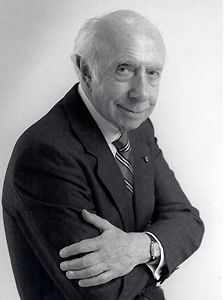

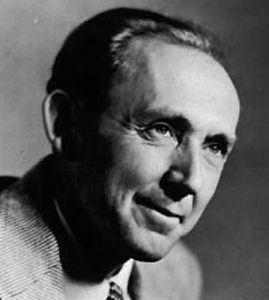
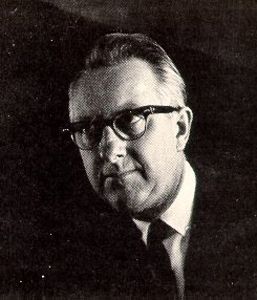
Gould, Moore, Harris & Effinger.
Source: Albany Records CD (My rip!)
Formats: FLAC (RAR), DDD Stereo, mp3(320)
File Sizes: 325 MB / 158 MB (FLAC version incl. cover & booklet)
Download Link – [Add to my reputation and send me a PM requesting the FLAC link!]
mp3 version – https://mega.nz/#!Q1IFUbrQ!l0cjshunsETzqEs589cY9tuZVf75E8QsRqHs20zFc3o
Enjoy! Don’t share! Buy the original! Click on "Reputation" button if you downloaded this album! 🙂
British Light Music
Though Ronald Binge (1910-1979) remains best remembered for his Elizabethan Serenade, a work that
has enjoyed world-wide popularity, this most attractive collection will soon dissuade anyone that he was just a one-
composition composer. Several other pieces will surely be familiar because of their use as radio and television theme
tunes, for example the flirtatious Miss Melanie, the pastoral The Watermill, the jaunty High Stepper and
the restful Sailing by. Yet this collection is also full of other pieces no less good, showing not least Binge’s perpetual
fascination with the capabilities of individual instruments. This may be most obvious in the attractive Concerto for Saxophone,
but throughout the collection there are rewarding passages for all sections of the orchestra. Binge was a masterly orchestrator,
his command of orchestral forces perhaps being best demonstrated here in the three Spanish pieces. It is typical of Binge’s
orchestral inventiveness that it was he who, as Mantovani’s orchestrator, devised the famous ‘cascading strings’ effect.
No Charmaine here, of course; but the effect is used in most remarkable fashion in the delightful Dance of the Snowflakes.
Music Composed by Ronald Binge
Played by the Slovak Radio Symphony Orchestra
With Kenneth Edge (alto saxophone)
Conducted by Ernest Tomlinson
"For this recording, Ernest Tomlinson has taken over Marco Polo’s British Light Music baton to
advantage. His deep knowledge of the tradition enables him to bring the best out of pieces of
contrasted style that need to make their full effect in just a few minutes. He also provides
accompanying notes that most admirably provide insight into not only Binge’s orchestral
technique but also the fondness with which he was regarded by those who knew him.
One way and another this must be one of the most successful of this excellent series,
and it can only heighten the standing of a fine English light music composer."
Gramophone
Source: Marco Polo CD (My rip!)
Formats: FLAC (RAR), DDD Stereo, mp3(320)
File Sizes: 312 MB / 165 MB (FLAC version incl. covers & booklet)
Download Link – [Add to my reputation and send me a PM requesting the FLAC link!]
mp3 version – https://mega.nz/#!EwZCxJjB!0M_H0-NRt9BoijWNij-6Vp5066lnyGmquInVIME4B_o
/>
Enjoy! Don’t share! Buy the original! Click on "Reputation" button if you downloaded this album! 🙂
Modern: Dodecaphonic
In these two "middle" symphonies (1958/64), Roger Sessions (1896-1985) had now fully embraced and
developed his special brand of 12-tone music (closer to Berg than Schoenberg), writing in a complex polytonal
style that nonetheless manages to keep things clear and accessible. The later Rhapsody for Orchestra (1970)
is a bit lighter-textured.
Symphony No.4 was composed in 1958. It was commissioned by the Minneapolis Symphony Orchestra
for the Minnesota Centennial, and premiered by the Minnesota Orchestra conducted by Antal Dor???ti in 1960.
The second movement’s basically slow tempo is interrupted twice by faster episodes. This movement was
intended as an elegy for the composer’s brother, John, who died in 1948. The finale, also slow, increases in
intensity towards its close. Andrea Olmstead describes all of Sessions’s symphonies as "serious" and "funereal".
The Symphony No.5 was commissioned in 1960 and completed in 1964. It was commissioned
by Eugene Ormandy and the Philadelphia Orchestra, and the first movement only was premiered by them
in February 1964, the rest not being completed until that December. It is in three connected movements,
with a pause after the first. It is scored for three flutes, three oboes, four clarinets, three bassoons, four
horns, two trumpets, three trombones, one tuba, timpani, percussion, piano, harp and strings.
Music Composed by Roger Sessions
Played by the Columbus (Ohio) Symphony Orchestra
Conducted by Christian Badea
"The Columbus Symphony has not put out records of recent. Shame! For this recording is authoritative.
Badea keeps these works on a tight rein and tension is always sustained. The sound quality sounds
rather synthetic, however. The orchestra plays with great virtuosity and power, which is much impressive
for a unknown orchestra. I have always enjoyed the 4th symphony, with its humourous Burlesque, the
2nd movement Elegy (with stormy middle section) and 3rd movement Pastorale. The 5th is a much
more concentrated work, more on the angle of the Harris 3rd symphony. The rhapsody is a further
pruning of his style as the composer was striving for more compactness of form (eg the Concerto
for Orchestra, a late masterpiece)."
Amazon Reviewer
Source: New World Records CD (My rip!)
Formats: FLAC (RAR), DDD Stereo, mp3(320)
File Sizes: 194 MB / 124 MB (FLAC version incl. covers & booklet)
Download Link – [Add to my reputation and send me a PM requesting the FLAC link!]
mp3 version – https://mega.nz/#!o0h0nZZY!U5Ts2DDagy7WD-CXyTI_oKZjOvC8GggwadeSdF7kSIk
/>
Enjoy! Don’t share! Buy the original! Click on "Reputation" button if you downloaded this album! 🙂
Modern: Neo-Classical
Edmund Rubbra (1901-1986) is now so associated with the symphony that it is almost forgotten that he
came to the form late in his career, having spent much of his younger life as a freelance composer. Indeed,
it was his work as a pianist which brought him into contact with the European scene, and he played for the
dancers of the Ballets Russes on their visits to London. Rubbra developed a particualr interest in the music
of Debussy, Strvinsky and Bart???k – influences that should be borne in mind when listening to these early works.
The Third Symphony was composed between 1938 and 1939 and was first performed in Manchester
by the Hall??? Orchestra under Malcolm Sargent on 15 December 1940. The first performance was to take
place in London on 23 September, but had to be cancelled due to an air raid. The companion work in the
programme, perhaps significantly, was the Second Symphony of Brahms.
The first movement is closer to classical sonata form than any of his other symphonic works, but the opening
scales and affectionately Sibelian material find eventual resolution only in the fugue subject and its ascending
scalic upbeat at the end of the work. His architectural sense with regard to the close connection between
musical content and texture is clearly shown in his orchestration. The work had an advocate in Rubbra???s
friend Bernard Herrmann, (now largely remembered for his film score), who, in his conducting of the work,
particularly impressed Rubbra with his close attention to textural detail.
Seventeen years later Rubbra had begun his Seventh Symphony. It was a work of his symphonic
maturity and contains one of the greatest single movements, the Passacaglia finale. It was commissioned
for the City of Birmingham Symphony Orchestra and was conducted by Andrzej Panufnick in 1957. The seed
of the pensive C minor conclusion to the symphony is already hld at the beginning of the work,. whilst the
rhythmic solidity of the first movement finds release in the rhythmically asymmetrical scherzo, one of
Rubbra???s most engaging movements. The concluding passacaglia and fugue are the emotional heart of
the Symphony, its obvious precedent being the passacaglia in the finale of the Fourth Symphony of Brahms.
Music Composed by Edmund Rubbra
Played by the BBC National Orchestra of Wales
Conducted by Richard Hickox
"With this disc Richard Hickox reaches the penultimate issue in his magisterial survey of the Rubbra
symphonies. Only the Fifth and Eighth (Hommage a Teilhard de Chardin) remain. For some years the
Third was a repertory piece, at least on BBC programmes, but it fell completely out of favour in the
late 1950s and I can???t remember a single broadcast in the 1970s and early 1980s. Commentators have
noticed a certain Sibelian cut to its opening idea (with woodwind in thirds) but everything else strikes
me as being completely personal. There is a whiff of Elgarian fantasy in the fourth variation of the
finale. It has been called the most genial and relaxed of the symphonies but there is, I think, a pastoral
feel to many of the ideas, bucolic even (a bar before fig. 5, track 1, 2’34”), in the same way that there
is about the Brahms Second Symphony. Brahms springs to mind in the masterly variations and fugue
of the finale, for not long before, Rubbra had orchestrated the Brahms Handel Variations. Richard
Hickox and his fine players give a very persuasive and totally convincing account of the symphony.
I recall during the early 1950s hearing Stokowski conducting the Fifth Symphony and by scrupulously
observing every dynamic nuance he managed to make the sometimes opaque textures far more
transparent. So in these performances does Hickox.
Anyone coming to the Seventh for the first time, particularly in this performance, will surely not
fail to sense the elevated ??? indeed exalted ??? quality of its musical thought. Its opening paragraphs
are among the most beautiful Rubbra ever penned and it is evident throughout that this is music
that speaks of deep and serious things. Fine though Sir Adrian???s account of the Seventh was,
this newcomer speaks with even greater directness and power. The horn playing in the opening
is eloquent and the orchestral playing throughout is of the high standard we have come to expect
from this ensemble. I should also have mentioned earlier that there is a particularly fine oboe
contribution in the Third Symphony. A pity the players are not credited.
To sum up, these are magnificent and impressive accounts which completely supersede the
earlier versions, and I need hardly add, given its provenance, that the recording is truthful
and splendidly balanced. Recommended with all possible enthusiasm."
Gramophone
Source: Chandos Records CD (My rip!)
Formats: FLAC (RAR), DDD Stereo, mp3(320)
File Sizes: 348 MB / 162 MB (FLAC version incl. covers & booklet)
Download Link – [Add to my reputation and send me a PM requesting the FLAC link!]
mp3 version – https://mega.nz/#!wphgwKDB!wLHMzJGJguSgT6tY45pOiLQx8aJnmfQAX7CeCM3YN0I
Enjoy! Don’t share! Buy the original! Click on "Reputation" button if you downloaded this album! 🙂
Modern: Tonal
English composer Robin Holloway (*1943) sang as a chorister at St Paul’s Cathedral and studied composition
with Alexander Goehr as a teenager. He was a lecturer in music at Cambridge University for 32 years between
1975 and 2011, teaching a generation of composers including Judith Weir and Thomas Ad???s.
Sea-Surface Full of Clouds: Continuing the vein of song writing in the song cycles, op. 24-27, the original
plan for a long-mooted setting of Wallace Stevens’ virtuoso display of linguistic jouissance gave each of its four
soloists a virtual cantata-within-a-cantata of their own between each of the main poem’s five cantos. This unreal
scheme, quite unworkable, was gradually whittled down and eventually dropped entirely. Even when confined
to Stevens alone, the soloists have plentiful chance to develop variegated characters as they interweave amongst
themselves, the chamber chorus, and the chamber ensemble, "in what I hope is an orgy of hedonistic /
decorative rapture: a Sea Surface Full of Fun."
The Romanza, a mini violin concerto, four interlinked movements in a single span, was written for
relief and contrast during the hard labour on the details of Holloway’s opera Clarissa.
Music Composed by Robin Holloway
Played by the City of London Sinfonia
With Penelope Walmsley-Clark (soprano) & Margaret Cable (mezzo-soprano)
And Martyn Hill (tenor) & Charles Brett (counter-tenor)
With Erich Gruenberg (violin)
Conducted by Richard Hickox
"To quote Harold Wilson, ”a year is a long time in politics”. In music, on the other hand, a decade
seems to pass like the blinking of an eye. This thought is prompted by the realization that when
Chandos first released this recording they were effectively introducing Robin Holloway’s music to the
record-buying public. Ten years on, nothing has changed: Chandos are again demonstrating considerable
faith by issuing the first CD to be devoted entirely to Holloway’s music. He remains dolefully under-
represented in the catalogues, despite a healthy following among devotees of contemporary British
music, though I see his Second Concerto for Orchestra (NMC, 5/94) has made it to the second round
of this year’s Gramophone Awards (see page 18).
If an introduction is required I can think of few more suitable works than these. Sea Surface Full of
Clouds, dating from 1974-5, is an opulent choral work, beautifully re-creating the ”perpetual variation
within the unchanging order of events” of Wallace Stevens’s clever and picturesque poem by means of,
as Holloway himself puts it, ”perpetual variation of colour and texture rather than traditional harmonic
and melodic means”. It is splendidly captured in this gloriously full-blooded and intensely committed
performance from Hickox and his highly accomplished team of musicians. The digital recording may
seem a trifle hard-edged but every detail of the music is portrayed with stunning clarity.
The Romanza is an even more attractive work, vividly highlighting Holloway’s characteristic blending
of the acerbic with the lyrical and displaying an intuitive ear for orchestral colour. Eric Gruenberg’s
performance has great distinction and again Hickox directs a most sensitive and compelling account.
To quote AW writing over a decade ago ”this [is] an issue not to be missed”.’"
Gramophone
Source: Chandos Records CD (My rip!)
Formats: FLAC (RAR), DDD Stereo, mp3(320)
File Sizes: 262 MB / 134 MB (FLAC version incl. covers & booklet)
Download Link – [Add to my reputation and send me a PM requesting the FLAC link!]
mp3 version – https://mega.nz/#!4tJWlDzC!HiAzUb-XYZEakdHwQEJn8FhrLU5XgwsbJ8DGTrHxoEM
/>
Enjoy! Don’t share! Buy the original! Click on "Reputation" button if you downloaded this album! 🙂
Late Romantic/Neo-Classical
Not surprisingly, the principal influence on Danish composer Poul Schierbeck???s marvelous, and only Symphony (1921)
is Carl Nielsen, who also conducted the work???s premiere. The first movement opens with a gloss on Nielsen???s Fourth Symphony,
but the continuation harks back to the Third (particularly its first-movement central waltz). The slow movement, a fascinating
and powerfully ???Nordic??? study in muted colors, impresses as wholly original, while the brief, intermezzo-like third movement returns
to the world of Nielsen, and with its single climactic trombone glissando even anticipates the Humoreske of the Sixth Symphony.
The finale, a gorgeous theme and variations (more shades of Nielsen???s Sixth!) whose opening gives Elgar???s ???Nimrod??? a good run
for its money (in mood, not melody), leads to a witty and deliciously timed quiet ending that sets the seal on a fascinating and
very appealing work.
Where Schierbeck parts company with Nielsen is in his approach to scoring. There???s a plushness to this music, with lavish use
of percussion and celesta, utterly foreign to the senior composer???s sound world, with an exquisite sense of sonority and masterly
control of texture. These virtues are equally evident in the Radio-Rhapsody, actually a tone poem based on the story of Adrienne
Lecouvreur, of all things. It???s great fun, brilliantly written and consistently engaging.
Music Composed by Poul Schierbeck
Played by the Artur Rubinstein Philharmonic Orchestra
Conducted by Ilya Stupel
"You might be surprised to find an obscure composer within the DEFINITIVE recordings. That’s because
I was very pleasantly surprised myself when I first heard this wonderful symphony.
Schierbeck studied under Nielsen and was therefore influenced by him, but posseses his own unique voice
and writing style. The symphony was actually conducted by Carl Nielsen in 1922 and very well received
by the public and critics alike. What struck me as exceptional in this work is the very simple yet wonderful
slow movement. The whole movement is developed around a 2 note motif and a 3 note motif that seem
to compliment each other, and very gradually over a period of about eleven minutes, transform the
mood from sad and melancholy to bright and uplifting, and all of this happens almost subconsciously.
The effect is very striking and shows that Schierbeck had talent and great potential. Unfortunately for
us he only wrote one symphony. He held a post as organist in Denmark most of his life and devoted
most of his composition to organ and choral works. Expand your CD collection by giving this one a try.
You will not regret your choice."
Classical Musical Sentinel
Source: Danacord CD (My rip!)
Formats: FLAC (RAR), DDD Stereo, mp3(320)
File Sizes: 270 MB / 144 MB (FLAC version incl. covers & booklet)
Download Link – [Add to my reputation and send me a PM requesting the FLAC link!]
mp3 version – https://mega.nz/#!htp0XRwY!ayudPHJ6eG_6aJB2tghaD8tzHCaijAFlf1dol13sHnE
Enjoy! Don’t share! Buy the original! Click on "Reputation" button if you downloaded this album! 🙂
Modern: Tonal
Havergal Brian???s Second Symphony (1930-31) is music on an epic scale. Partly inspired
by Goethe???s play G???tz von Berlichingen and scored for a huge orchestra that includes two
pianos, three timpanists and an astonishing sixteen horns, the score contains some of Brian???s
richest and most immediately appealing music. This revelatory performance by Brian stalwarts
the Royal Scottish National Orchestra and conductor Martyn Brabbins is the first
commercial recording to feature the full instrumental forces, as envisaged by the composer.
This performance of Brian???s Fourteenth Symphony (1959-60) is the first legitimate
recording of the work to have been made. Completed when Brian was 84 years old and embarking
on an astonishing Indian Summer of creativity that lasted until he was 92, the Fourteenth
is more compact, but no less heroic in spirit: a complex single movement encompassing a
kaleidoscopic range of moods and providing a perfect introduction to Brian???s late style.
Music Composed by Havergal Brian
Played by the Royal Scottish National Orchestra
Conducted by Martyn Brabbins
Source: Dutton Epoch CD (My rip!)
Formats: FLAC (RAR), DDD Stereo, mp3(320)
File Sizes: 337 MB / 157 MB (FLAC version incl. artwork & booklet)
Download Link – [This is a new album, so mp3 & FLAC links are available upon PM request and reputation-add only!]
Enjoy! Don’t share! Buy the original! Click on "Reputation" button if you downloaded this album! 🙂
Modern: Neo-Romantic/Neo-Classical
Qunihico Hashimoto (1904-1949) studied with Egon Wellesz in Vienna and associated with
Alois H???ba and Ernst Křenek, before meeting Schoenberg in Los Angeles when he was
returning to Japan. His music reflects elements of late romanticism, expressionism
and impressionism, as well as of the traditional music of Japan. His Symphony No.1
was written in celebration of the 2600th anniversary of the foundation of Japan, with
a first movement depicting the long history of the country, a second making
insistent use of a folk-melody, and a third consisting of variations and a fugue
on material derived from a Gagaku-like ceremonial song. The ballet music
Heavenly Maiden and the Fisherman is based on material from a Noh play.
Symphony No 2 was commissioned to celebrate Japan???s new postwar Constitution,
but combines jubilation with an introspective nostalgia. Three Wasan sets Buddhist
texts which describe the beauty of ???pure land??? or heaven, merging traditional chant with
bel canto expressiveness. Innovative for its time, the early Scherzo con sentimento
melds Japanese music with Western neo-classicism.
Music Composed by Qunihico Hashimoto
Played by the Tokyo Metropolitan Symphony Orchestra & Tokyo Geidai Philharmonia
With Akiya Fukushima (baritone)
Conducted by Ryusuke Numajiri & Takuo Yuasa
"Qunihico Hashimoto (1904-49) studied with Egon Wellesz (among others) and expressed interest in
the music of Krenek, H???ba, and Schoenberg, and yet his own music comes across as characteristically
late Romantic. The Symphonic Suite from the ballet Heavenly Maiden and Fisherman features typically
colorful orchestration and some very pretty tunes, including one that sounds a lot like the main theme
of Tchaikovsky???s Marche Slave. It offers 20 minutes of listening pleasure, plain and simple.
Symphony No. 1 was composed in 1940 in commemoration of the 2,600th anniversary of the founding of
Japan, the same occasion that resulted in the scandal surrounding Benjamin Britten???s Sinfonia da requiem
(the work was rejected on account of its being based on a Christian theme). Though no masterpiece,
the symphony is an unexpectedly graceful example of Romantic Nationalism, beginning with a lovely
pastoral opening movement (with interpolated dance and march episodes), proceeding to a deliciously
catchy scherzo, and ending with a theme and variations finale. The fugue that caps the variations
rises to a remarkably terse and unpompous conclusion, given the occasion in question. Hashimoto
writes with a fluency and craftsmanship that places this work on a much higher level than, say, the
typical socialist realist potboiler to which it might otherwise be compared. Hopefully most listeners
will be able to get beyond the work???s wartime provenance and nationalist leanings and simply enjoy
it as the attractive and colorful music that it is.
The Tokyo Metropolitan Symphony Orchestra under Ryusuke Numajiri plays both works with the
necessary gusto and panache, and they are superbly recorded as well. Naxos??? Japanese music series
certainly looks to be as interesting as its explorations of American, Spanish, and British music, and
should help to spark increasing interest in this largely unknown legacy. Give this a try. You won???t
be sorry."
Classics Today
"Western-style music existed in Japan before World War II but was not exactly common; the composer
under examination here, Qunihico (or Kunihico) Hashimoto, was largely self-taught in the 1920s. In
the 1930s he studied in Vienna with Egon Wellesz and briefly in Los Angeles with Arnold Schoenberg,
but there is little of their influence to be heard in the music here. The Symphony No. 2 was composed
in 1947 in response to a commission for a work to celebrate Japan’s new constitution, but he seems
to have begun the work during the war, which would make it a very different kind of celebration.
It doesn’t matter much, for the work is in the vein of Russian symphonic music of the late 19th
century, with Japanese-inflected melodies substituted for the Russian ones. More effective are the
Three Wasan, composed in 1948 and thus one of the last works completed by Hashimoto before
his death from stomach cancer the following spring. Wasan are Buddhist chants in a fixed poetic
form, and here the balance between Western orchestral song and melodic shapes of a non-Western
sort is very keenly struck, with baritone Akiya Fukushima matching that balance with an unusual
vocal timbre. These are wonderful short lyrical songs. The final Scherzo con sentimento is a
youthful work, slight but somehow conveying the sense of discovery that must have accompanied
it. The performances by the Tokyo Geidai Philharmonia under Takuo Yuasa likewise involve
excitement at the rediscovery of this almost unknown music, which is of interest to those occupied
with the presence of Western music in Asian countries."
All Music
Source: Naxos CD (My rip!)
Formats: FLAC (RAR), DDD Stereo, mp3(320)
File Sizes: 268 MB / 153 MB + 269 MB / 152 MB (FLAC version incl. covers & booklets/notes)
Download Links – [Add to my reputation and send me a PM requesting the FLAC link!]
mp3 version (Symphony No.1) – https://mega.nz/#!FsJlVbzb!qQNiSm_nOBlKgIPxPnJCDhgGdrqUkl4ApDIxZUbfQoo
mp3 version (Symphony No.2) – https://mega.nz/#!R9RFWQoC!C7cjP28EYs20RIL7ecmxBTpSVdDsyT6pthKOTSp33V8
Enjoy! Don’t share! Buy the original! Click on "Reputation" button if you downloaded this album! 🙂
Modern: Tonal
Hailed by the New York Times for her musical ???honesty, clarity and compositional skill???,
Persis Parshall Vehar has had works commissioned and performed by leading orchestras,
opera companies, ensembles, soloists and schools throughout the United States, Canada, and
Europe. With over 300 compositions ranging from solo song to full orchestral works and operas,
Vehar???s works have been performed at many of the leading concert halls throughout Europe
and the United States. Conductor JoAnn Falletta said, ???Persis is a composer of great imagination
and tremendous talent. She enjoys writing for musicians whom she knows and cares about,
and her music is always deeply personal and very communicative.???
Music Composed by Persis Parshall Vehar
Played by the Buffalo Philharmonic Orchestra & The Amberg Chamber Ensemble
With John Fullam (clarinet) & Persis Parshall Vehar (piano)
Conducted by JoAnn Falletta
"In addition to the concerto, clarinetists will be excited to hear many new pieces for their instrument …
the Jukebox Dances for clarinet and piano will garner immediate popularity … Ms. Vehar???s description
of the ???Tango for Two-Left Feet??? adds to the humor inherent in the music … City of Light is full of more
than 70 minutes of music, and, despite the fact that it is music by one composer, the pieces are varied
and everyone should find something that appeals to them. This is a well-produced disc of excellent
performances and is definitely recommended.???"
The Clarinet
Source: Klavier Records CD (My rip!)
Formats: FLAC (RAR), DDD Stereo, mp3(320)
File Sizes: 349 MB / 190 MB (FLAC version incl. cover & booklet)
Download Link – [Add to my reputation and send me a PM requesting the FLAC link!]
mp3 version – https://mega.nz/#!PRchiZDK!-OQnP2RkLttUSSgpLpZO65lkh2jZeIygr0w0DTNYOwA
/>
Enjoy! Don’t share! Buy the original! Click on "Reputation" button if you downloaded this album! 🙂
Modern: Tonal
Awarded the Pulitzer Prize in 2012, Kevin Puts now stands in the forefront of contemporary
American composers. His powerfully conceived Symphony No. 2 is a musical illustration of
the events of 9/11 and traces a movement from unsuspecting bliss and rhapsody through violent
upheaval to a reflective epilogue that contains both uncertainty and hope. Possibly inspired by
thoughts of the Mississippi, River’s Rush employs novel harmonies, while elegant transparency
distinguishes the refined beauty of the Flute Concerto.
Music Composed by Kevin Puts
Played by the Peabody (Institute) Symphony Orchestra
With Adam Walker (flute)
Conducted by Marin Alsop
"For this 2016 Naxos release, Marin Alsop and the Peabody Symphony Orchestra present three world-
premiere recordings of works by Kevin Puts, one of the most significant contemporary American composers
and winner of the Pulitzer Prize in 2012. The Symphony No. 2 (2002), River’s Rush (2004), and the
Flute Concerto (2013, revised 2014) reveal Puts as a master of orchestral sonorities and a tone poet
of moods, which range from the ecstatic to the elegiac. The Symphony No. 2 is a powerful evocation
of 9/11, and Puts creates an atmosphere of tragedy that shifts from the innocent tonal ululations of
the opening to a violent cataclysm, which then resolves in a meditative section that nevertheless ends
with uncertainty. River’s Rush, ostensibly inspired by the Mississippi River, is a perpetuum mobile for
orchestra that depicts the water’s raging currents in rapid successions of short motives. The Flute Concerto
offers the most recognizable form in its three movements, opening with a poignantly lyrical section in
the Americana style of Copland, which is followed by a nocturnal Andante, a parody of Mozart’s "Elvira
Madigan" Piano Concerto, and a fantastic toccata finale that Adam Walker plays with impressive
virtuosity. This album is a fine introduction to a rising composer whose music is highly accessible,
emotionally satisfying, and memorable."
All Music
Source: Naxos CD (My rip!)
Formats: FLAC (RAR), DDD Stereo, mp3(320)
File Sizes: 238 MB / 132 MB (FLAC version incl. covers & booklet)
Download Link – [This is a new album, so mp3 & FLAC links are available upon PM request and reputation-add only!]
Enjoy! Don’t share! Buy the original! Click on "Reputation" button if you downloaded this album! 🙂
BTW: There was a small glitch in the FLAC link I sent out for the Brian Symphonies Nos. 2 & 14: Just remove the "^" in the link and it should work fine!
Modern: Tonal/Light Music
A colorful collection of popular Latin-American short orchestral works,
not all of them familiar. Excellent performances!
Music by [see header]
Played by the Venezuela Symphony Orchestra
Conducted by Theodore Kuchar
"These performances are very slick. The tightness of ensemble in Moncayo???s Huapango shows up
the sloppiness of most other versions. Kuchar sets and maintains a perfect tempo here and elsewhere
(as you would expect from a Prokofiev specialist). The recording quality is sharp-edged and bright,
adding to the excitement. As to the program: There are several such anthologies around. M???rquez???s
second Danz???n has had far more outings than his other seven in the series (to my knowledge Danz???n
Nos. 3 and 4 are the only others to have appeared on disc), while the Moncayo and Ginastera pieces
are positively ubiquitous. Estancia, for example, I counted nine versions of the ballet suite alone in
my collection. Fern???ndez???s short Batuque is familiar from Bernstein???s 1963 Latin American anthology,
which is brilliantly conducted and does not duplicate any of the other works on Kuchar???s disc. The
rarities here are Revueltas???s joyous Janitzio (in place of the usual Sensemay???) and the pieces by
the Venezuelans Aldemaro Romero (1928-2007) and Yuri Hung (b. 1968). Their works are dance-
based showpieces in the vibrant Latin style, but quite individual even so. Hung???s Kanaima reveals
a distinctive primitive pulse with drums dominating, while Romero???s Toccata Bachiana, a clear
homage to the D-Minor Toccata and Fugue (possibly by Bach) takes a while to work up to its
monumental climax."
Fanfare
Source: Brilliant Classics CD (My rip!)
Formats: FLAC (RAR), DDD Stereo, mp3(320)
File Sizes: 263 MB / 127 MB (FLAC version incl. covers & conductor bio)
Download Link – [Add to my reputation and send me a PM requesting the FLAC link!]
mp3 version – https://mega.nz/#!7BUQzTKa!WD2gIZY2v9dnfwTsgxPQlkmuSdmrpmVnYbN46WQP9ZQ
Enjoy! Don’t share! Buy the original! Click on "Reputation" button if you downloaded this album! 🙂
Modern: Tonal
Following a highly successful recording of Copland’s ballet music, John Wilson, a specialist
in American music, and the BBC Philharmonic present the first volume of the composer’s complete
symphonic output.
This unique collection of vivid and energetic pieces highlights Copland’s personal, unorthodox
compositional language. The mixture of works of austerity and tense excitement ranges widely,
from the twenty Orchestral Variations on an original theme (originally written for piano)
to the single-movement controversial Symphonic Ode, a rhythmically complex piece written
in its original incarnation for a huge orchestra including eight horns and five trumpets.
The album features also the lesser-known Short Symphony (No. 2) and early Symphony for
Organ and Orchestra, in which the solo instrument throughout is closely integrated with the
music of the orchestra.
The organ soloist is the young Jonathan Scott. Since a highly successful Gershwin concert
at the Royal Albert Hall in 2014, he is increasingly acclaimed around the world for his
performances of American music.
Music Composed by Aaron Copland
Played by the BBC Philharmonic Orchestra
With Jonathan Scott (organ)
Conducted by John Wilson

Copland, with (from the left) Roger Sessions & wife, conductor Ernest Ansermet.
Source: Chandos Records CD (My rip!)
Formats: FLAC (RAR), DDD Stereo, mp3(320)
File Sizes: 330 MB / 186 MB (FLAC version incl. covers & booklet)
Download Link – [This is a new album, so mp3 & FLAC links are available upon PM request and reputation-add only!]
Enjoy! Don’t share! Buy the original! Click on "Reputation" button if you downloaded this album! 🙂
Modern: Neo-Romantic
Roland Baumgartner was born in Lower Austria in 1955. At the age of 5 years already,
he started his musical training being tutored by a number of renowned Austrian music experts.
Later on, he studied music composition, piano and the trumpet at the Vienna Conservatory.
At age 18 he already graduated, and at 21 he became director of the "Salzburger Musikschulwerk",
the youngest director ever since the founding of this music school. During that time he
composed the ballet Bergsegen, which was performed for the first time by the Royal Ballet of
London. In 1979 he went to the United States to study music composition with Leonard Bernstein.
The influence of this eminent teacher led to Baumgartner’s decision to work henceforth as a
freelance composer and conductor.
Music Composed by Roland Baumgartner
Played by the Bolshoi Symphony Orchestra
And with the Bolshoi Opera Choir
Conducted by Konstantine Krimets
"This unusually multi-facetted approach as a composer and conductor awakened the interest of international
personalities in the world of film and TV production. With an abundance of music titles for international films
such as Deadly Games, Joseph’s Daughter, Body and Soul, Jungle Warriors, Night of Four Moons, The Secret
of The Black Dragon (Manson Inter.Group/Orion) and Ali Baba, Roland Baumgartner demonstrates his incredible
versatility. More than 100 TV films and series were entrusted to him by patrons such as the BBC, SRG, RA2,
ORF, ZDF, ARD, RTL, ARTE, DEUTSCHE WELLE, BR and many more.
His largest symphonic opus so far, the Missa Pacis, premi???red in Philadelphia at the 200-year-anniversary of
the American constitution in June of 1987, in the presence of the United States Governors and representatives
from 80 countries.
On occasion of the 100-year-anniversary of Hollywood, Roland Baumgartner produced a symphonic
composition for large orchestra and choir, the Hollywood Symphony. It was published as a CD series in 1996.
Roland Baumgartner is working with many international interpreters, such as Peter Hoffmann, Engelbert
Humperdinck, Drafi Deutscher, Margot Werner und Jennifer Rush, Vienna Boys Choir, Philadelphia Boys
Choir, Ramon Vargas, Peter Dvorsky
He supports humanitarian activities of Lions Club Vienna MozART."
Source: Brilliant Classics CD (My rip!)
Formats: FLAC (RAR), DDD Stereo, mp3(320)
File Sizes: 322 MB / 173 MB (FLAC version incl. cover & composer bio)
Download Link – [Add to my reputation and send me a PM requesting the FLAC link!]
mp3 version – https://mega.nz/#!6UFAjZ4L!TlWROUfCd3Q0o2JdIBHWOs5mWd2Z_wgvhOphO_bTM78
Enjoy! Don’t share! Buy the original! Click on "Reputation" button if you downloaded this album! 🙂
Modern: Tonal
LUMINESCENCE brings to light six works for small and large orchestra, showcasing the
inspired directions and composers of contemporary orchestral music. Marvin Schluger’s
Manhattan Suite for full orchestra is being released 14 years after its recording.
New York, 2013 by Raymond Bokhour is another piece alluding to the Big Apple,
as experienced by the composer that year. Serenade for Strings by Robert Burrell
captures the musicality of Australian avian species while Daniel Burwasser’s piece
Catching Fireflies reflects the innocence and playfulness of childhood pastimes.
David Kirtley contemplates the life and mystical journey of the Oglala Sioux holy
man, Nicholas Black Elk, in Leaves falling from the Holy Tree. In the tone poem,
Within a Dance, Rain Worthington evokes the intimacy of a first invitation
to dance, and the continuing dance of love.
Music by [see above]
Played by the Moravian Philharmonic & Warsaw National Philharmonic Orchestras
And The Seattle Symphony & Kiev Philharmonic Orchestra
Conducted by Stanislav Vavr???nek, Petr Vronsk??? & John Yaff???
And by Gerard Schwarz & Robert Ian Winstin
"The longest work here, Serenade for Strings by Robert Burrell, inevitably calls up comparisons with similarly
titled works by Tchaikovsky and Dvoř???k, with which it does not compare. Based loosely on the sounds of
Australian birds, the work is pleasant and flows well, and it is nicely played by the Moravian Philharmonic
Orchestra under Petr Vronsk???. The same conductor and orchestra perform Within a Dance???A Tone Poem
of Love by Rain Worthington, a work that more-or-less recalls Weber???s Invitation to the Dance ??? but with
less formality and more of a focus on the budding of a relationship that begins during the dance itself.
Leaves Falling from the Holy Tree is David Kirtley???s exploration of Oglala Sioux holy man Nicholas Black Elk,
although the tone poem ??? played by the Kiev Philharmonic under Robert Ian Winston ??? does not seem
especially evocative of anything more than a general mystical experience. New York, 2013 by Raymond
Bokhour (played by the Moravian Philharmonic Orchestra under Stanislav Vavrinek) and Manhattan Suite
by Marvin Schluger (performed by the Warsaw National Philharmonic Orchestra under John Yaff???) are
both tributes to and personal experiences of New York City, and while both are fine, neither seems
particularly adventurous or unusual in the type of focus it brings to the area. A smaller matter, and
one portrayed with greater grace and a welcome light touch, is the innocence of childhood fun as
heard in Catching Fireflies by Daniel Burwasser, played by the Seattle Symphony Orchestra under
Gerard Schwarz. Disparate subjects, different compositional styles, multiple orchestras ??? this is a
CD for listeners who want a sampling of contemporary music and the people who create it."
Infodad
Source: Navona Records CD (My rip!)
Formats: FLAC (RAR), DDD Stereo, mp3(320)
File Sizes: 338 MB / 165 MB (FLAC version incl. covers & booklet)
Download Link – [Add to my reputation and send me a PM requesting the FLAC link!]
mp3 version – https://mega.nz/#!jA9w2BQB!Gw-rbMW9FRVR4zOud5dv05ZyRp-ATuIO0Q2yhhUHJLY
/>
Enjoy! Don’t share! Buy the original! Click on "Reputation" button if you downloaded this album! 🙂
Modern: Tonal/Wind Band
Nigel Hess (b. 1953) read music at Cambridge University, where he was Music Director of
the famous Footlights Revue Company. He has since worked extensively as a composer and conductor
in television, theatre and film. He has written extensively for wind band, with ten major works
available from Faber Music. These are performed worldwide and regarded as part of the core
repertoire for this genre.
Hess has also composed much concert music, particularly for symphonic wind band, including
commissions from the Royal Air Force and the Band of the Coldstream Guards. These are performed
worldwide and regarded as part of the core repertoire for this genre. They are all available
from Faber Music.
Music Composed and Conducted by Nigel Hess
Played by the London Symphonic Wind Orchestra
And the Pupils of Dauberry Middle School, Bedford
"Nigel Hess has worked primarily in the field of television, theatre and film, contributing 20 scores
for the Royal Shakespeare Company. He knows how to orchestrate, and he has a genuine melodic
facility. This is shown readily in The TV Detectives, which brings together five of the composer’s TV
themes of some memorability, including Dangerfield, Wycliffe and Hetty Wainthrop Investigates.
All the concert music here was commissioned, mostly for expert youthful groups of wind instrumentalists,
and easily the most impressive piece is the exhilarating To the Stars, which gets a real lift-off by the
enthusiastic contribution from the children of Daubney Middle School. They obviously enjoy themselves
hugely and their spontaneous surges of vocal energy take the listener with them. However, Thames
Journey, although it opens with trickling woodwind at its source like Smetana’s ‘Vltava’, and then
introduces a Wiltshire folk melody on the horn as its principal idea, is little more than a lively pot-
pourri, including Greensleeves and later The Lass of Richmond Hill.
The three East Coast Pictures are of the Eastern seaboard of the USA and are curiously without any
strong American inflexions. Stephenson’s Rocket is robust and jolly, but I expected a better train
imitation. The Winds of Power is more evocative, but to my ears rather loosely constructed. More
succinct is Scramble! which celebrates the Battle of Britain vividly enough, but its invention is not
especially memorable. Yet all these works have plenty of vitality and must be grateful to play, so
serve their main purpose well enough. They are brilliantly presented here and given excellent
Chandos sound.’"
Gramophone
Source: Chandos Records CD (My rip!)
Formats: FLAC (RAR), DDD Stereo, mp3(320)
File Sizes: 371 MB / 187 MB (FLAC version incl. covers & booklet)
Download Link – [Add to my reputation and send me a PM requesting the FLAC link!]
mp3 version – https://mega.nz/#!uUt1TBaI!8SgT7wlIDrpkBGXSKDv4Us3cSIcbfv7ZETIGNRrPicQ
Enjoy! Don’t share! Buy the original! Click on "Reputation" button if you downloaded this album! 🙂
Modern: Tonal
Martin Yates and the Royal Scottish National Orchestra make a striking discovery
by coupling the second symphonies of John Gardner and John Veale, works dating from
1984-85 and 1965 respectively. Gardner was a well-loved figure in his time, as both teacher and
composer, writing an enormous amount of music. The Second Symphony espouses a traditional
treatment of the orchestra together with a personal lyricism, which will appeal to all who have
taken Malcolm Arnold to heart. John Veale???s career as a composer spanned half a century,
including notable film music, but was interrupted by a long period when his lyricism was deemed
critically unacceptable. The four-movement Second Symphony is a glorious personal statement,
from the sadness of the opening cor anglais solo (later developed in the powerful slow movement)
to the punchy, rhythmic writing and bold scoring, in which one is tempted to find elements of
his sympathy for the American symphonies of the 1940s.
Music by John Gardner & John Veale
Played by the Royal Scottish National Orchestra
Conducted by Martin Yates
"This virile recording of the John Gardner Second Symphony completes his symphonic trilogy on disc.
The First Symphony is on Naxos and the Third on ASV. You can read Paul Conway’s rewarding article on
the three Gardner symphonies here. John Quinn’s review of the Naxos disc can be read here.
The four-movement Gardner work stays true to the dramatic-melodious and broadly accommodating
traditions of the British musical renaissance. It’s never a work anywhere near the pastoral-mysticism of
Finzi, Howells and Hadley. Ploughing its eclectic and convincing way it absorbs traditions from Nielsen,
Arnold and Shostakovich and expresses them personally and fluently. The Moderato recalls the rhapsodising
gloom of the opening of Bax’s Third Symphony but soon sings and wings onwards in tropes familiar from
Nielsen and Sibelius. After a fantastic Scherzo of which Malcolm Arnold would have been proud there’s a
long misty-romantic Andante ??? the longest of the four movements ??? with surging and striving strings.
The finale moves through a variety of voices, all intriguing: something close to Kurt Weill’s writing for
orchestra, sweeping strings in line with Franz Schmidt and again quite a lot that suggests a love for
the music of Nielsen. In 1952 Gardner had his orchestral Variations on a Waltz by Carl Nielsen
premiered at the Cheltenham Festival by the Hall??? and Barbirolli. The Symphony ends in
crashing triumph.
John Veale has had scant representation in the CD catalogue. First came his Violin Concerto on
Chandos. Add to this various discs presenting his chamber music. If Gardner, at least at a superficial
level, references the sounds of other contemporary and composers, Veale is more instantly individual;
not that he lacks for his own absorbed heritage. However his influences appear to me to be more
structurally resolved. There is something filmic about this music: a straining fine romanticism and
heroism that at times, like that of William Alwyn and Stanley Bate, is vividly communicative.
His teacher during his years in the USA, Roy Harris, also puts in unmistakable appearances at
times. Harris’s Third, Fourth (the non-vocal sections) and Seventh symphonies are a benign
presence. There’s also a shade of Constant Lambert in Veale’s steely slender lyrical writing for
violins. The Andante recalls the suppressed and sewn-up emotions of a Bernard Herrmann film
score. The Allegro finale is energetic yet alive with musical pith; Walton comes to mind as does
Bate’s Third Symphony. Don’t be put off by this litany of names. Veale deserves better than my
crude comparisons. The Second Symphony was premiered by Ruth Gipps and her London
Repertoire Orchestra."
Musicweb
Source: Dutton Epoch CD (My rip!)
Formats: FLAC (RAR), DDD Stereo, mp3(320)
File Sizes: 324 MB / 155 MB (FLAC version incl. covers & booklet)
Download Link – [This is a new album, so mp3 & FLAC links are available upon PM request and reputation-add only!]
Enjoy! Don’t share! Buy the original! Click on "Reputation" button if you downloaded this album! 🙂
Late Romantic
Many of those who listen to our latest Alphons Diepenbrock CD will be very surprised to learn that
this Dutch composer never was trained professionally as a musician. He was a philologist and taught the
Greek and Latin languages and in the philological disciplines. For this reason Diepenbrock might be described
as an amateur, but in reality he numbered among the best Dutch composers of his times. Nevertheless, he
learned mainly from experience and read as many books as he could about music history and music theory.
In addition, he of course attended the Concertgebouw performances whenever he had the opportunity to do so.
One of the fields in which he was especially interested was the theater and above all the great classical
tragedies. Here his career as a classical philologist and his calling as a composer complemented each other.
During the last tens years of his life Diepenbrock composed five incidental works, for Marsyas (1910),
Gijsbrecht van Aemstel (1912), The Birds (1917), Faust (1918), and Elektra (1920).
In these stage works he endeavored to combine the music in various ways with the theatrical elements of
dance and recitation. Nietzsche’s discussion of The Birth of Tragedy from the Spirit of Music (1872) was
one of his sources of inspiration. The critics frequently agreed that Diepenbrock’s music had more
character and appeal than the dramas concerned ??? or at least the translations and adaptations of them
that were available to him.
Music Composed by Alphons Diepenbrock
Played by the Bamberger Symphoniker
Conducted by Antony Hermus
"Alphons Diepenbrock was born on 2 September 1862 in Amsterdam and grew up in a Catholic family
of five children. As a child, Diepenbrock was attracted to music and he played the piano and the violin.
His parents did not support his wish to go to the conservatory and Diepenbrock went to study classical
languages instead. He composed in his spare time.
In 1888 he took his doctoral degree on a thesis on Seneca. In the same year he was appointed as a
classics teacher at the gymnasium in Den Bosch. In his spare time, he was still composing, as well as
writing essays on various subjects, such as music, painting, literature, philosophy, social history and
politics for journals such as De Nieuwe Gids and De Kroniek.
Dissatisfied with the educational system of that time and the uninspiring environment of the town
where he was living, Diepenbrock moved to Amsterdam in 1895. Here, he gave private lessons in
classical languages and started to focus more on composition. In 1895 he married Elisabeth de Jong
van Beek en Donk (1868-1939). They had two children: Joanna (1905-1966) and Thea (1907-1995).
As a composer, Diepenbrock was self-taught. Out of a feeling of insecurity, he was always polishing
his music. On the other hand, the collaboration with directors and singers who were convinced of the
qualities of his work, always fortified and helped him. Diepenbrock died in Amsterdam on 5 April 1921."
Source: CPO Classics CD (My rip!)
Formats: FLAC (RAR), DDD Stereo, mp3(320)
File Sizes: 269 MB / 155 MB (FLAC version incl. composer bio)
Download Link – [This is a new album, so mp3 & FLAC links are available upon PM request and reputation-add only!]
Enjoy! Don’t share! Buy the original! Click on "Reputation" button if you downloaded this album! 🙂
🙂 🙂 🙂
Thank you, dear wimpel69 !!!
Modern: Tonal
Nicolas Flagello (1928-1994) was one of the last American composers to pursue
traditional romantic musical values, intensified by modernist innovations in harmony
and rhythm, but without the irony or detachment of postmodernism. For him music was
a personal medium for spiritual and emotional expression, a view that was far from
fashionable during the years after 1945, when Flagello???s creative personality was
crystallizing, a time when ???originality??? and ???experimental??? techniques reigned supreme.
In such a milieu Flagello???s music gained little attention. Yet he held fast to his
ideals throughout his life, producing a large and varied body of work that included
six operas, two symphonies, eight concertos, and numerous orchestral, choral, chamber,
and vocal works, although much of it was still unperformed at the time of his death,
only in recent decades to find an increasingly sympathetic audience.
Music Composed by Nicolas Flagello
Played by the Slovak Radio Symphony Orchestra
Conducted by David Amos
"The performances by the Slovak Radio Symphony Orchestra, led by American
music specialist, David Amos, are all one could ask for…I continue to
be thrilled with Naxos’s American Classics series. They are performing a
mitzvah by bringing us so much music that otherwise we would never hear
in live concerts or encounter on CD. Thank you, Naxos!"
Amazon Reviewer
Source: Naxos CD (My rip!)
Formats: FLAC (RAR), DDD Stereo, mp3(320)
File Sizes: 288 MB / 169 MB (FLAC version incl. covers & booklet)
Download Link – [Add to my reputation and send me a PM requesting the FLAC link!]
mp3 version – https://mega.nz/#!fVtAVAxY!2ErrZNV7kGb0hfdQR9ZKSc47Bl9_NarT94lqHieZwTU
Enjoy! Don’t share! Buy the original! Click on "Reputation" button if you downloaded this album! 🙂
Modern: Tonal
GRAMMY??? Award-winning composer Michael Daugherty creates colourful musical portraits in this
recording, featuring larger-than-life personalities drawn from 20th-century American culture.
Tales of Hemingway is a dramatic cello concerto, evoking the turbulent life, adventures,
and literature of author Ernest Hemingway. American Gothic is a dynamic concerto for orchestra,
reflecting on the creative world of Iowa artist Grant Wood. Once Upon a Castle is a virtuosic sinfonia
concertante for organ and orchestra, inspired by the rich history of the Hearst Castle, built high
upon the California Pacific coast by billionaire Randolph Hearst, the subject of Orson Welles’ film
Citizen Kane. Under the baton of Music Director Giancarlo Guerrero, the GRAMMY??? Award-winning
Nashville Symphony is joined by Zuill Bailey, one of the leading cellists of his
generation, and GRAMMY??? Award-winning organist Paul Jacobs.
Music Composed by Michael Daugherty
Played by the Nashville Symphony Orchestra
With Zuill Bailey (cello) & Paul Jacobs (organ)
Conducted by Giancarlo Guerrero
"The style of American composer Michael Daugherty has evolved in the years since he made a splash with
works like Sunset Strip that mapped hip popular allusions onto a lean Stravinskian structure. From the evidence
of the two concertos and single orchestral work here, Daugherty has moved in the direction of neo-Romantic
program music, although the composer is still recognizable enough. The three works here, all inspired by icons
of American culture, make a satisfyingly coherent whole, but are varied in technique. The strongest work may
be the last. Once Upon a Castle was written in Ann Arbor, Michigan, in 2003 and revised in 2015. It is inspired
by the Hearst Castle in San Simeon, California, and by the film in which that home played such a large role,
Orson Welles’ Citizen Kane; and it captures very effectively the mix of epic grandiloquence and wistfulness in
that film, with the solo organ of Paul Jacobs evoking the vast spaces of the castle. The three-movement
American Gothic refers not only to that iconic Grant Wood painting, but also two of the painter’s others:
the central slow movement will make you want to look up Wood’s slightly surreal original. The opening
cello concerto, Tales of Hemingway, performed by cellist Zuill Bailey and the Nashville Symphony under
Giancarlo Guerrero (who premiered the work), may serve as a little scenic tour of some famous Hemingway
works, but does little to suggest their deeper currents. Nothing here is less than pleasing, though, and this
music is the bread and butter of the Nashville Symphony, which has established itself in the forefront of
American music that is both populist and contemporary. Recommended."
All Music
Source: Naxos CD (My rip!)
Formats: FLAC (RAR), DDD Stereo, mp3(320)
File Sizes: 353 MB / 177 MB (FLAC version incl. covers & booklet)
Download Link – [This is a new album, so mp3 & FLAC links are available upon PM request and reputation-add only!]
Enjoy! Don’t share! Buy the original! Click on "Reputation" button if you downloaded this album! 🙂
———- Post added at 11:15 AM ———- Previous post was at 10:28 AM ———-
I’ve made the following mp3 links publicly available now:
No.872 – Francis Chagrin: Symphonies Nos. 1 & 2
Thread 121898
No.878 – Cecil Armstrong Gibbs: Shorter Orchestral Works
Thread 121898
No.879 – Walter Braunfels: Konzertst???ck, Don Gil, Die Taubenhochzeit, Serenade
Thread 121898
No.880 – Ralph Vaughan Williams: The Fat Knight Suite, Henry V, Serenade to Music
Thread 121898
No.894 – Guan Xia: Symphony No.2, Symphonic Ballade, Gazing at the Stars from "Earth Requiem"
Thread 121898
No.898 – Anthony Burgess: Orchestral Works
Thread 121898
No.899 – Dawn to Dust: The Utah Symphony Play Read Thomas, Muhly & Norman
Thread 121898
No.901 – Butterworth: Fantasia – Scott: The Melodist and the Nightingales – Bax: Variations
Thread 121898
No.903 – Walter Braunfels: Don Juan, Variations on an Old French Song
Thread 121898
No.907 – Overtures from the British Isles, Volume 2 (Walton, Mackenzie, Ansell, Foulds, Parry)
Thread 121898
No.911 – Margaret Brandman: Firestorm Symphony, Lyric Fantasy, Binna Burra Dreaming, etc
Thread 121898
No.912 – Ye Xiaogang: Symphony No.3, The Last Paradise
Thread 121898
No.914 – Robin Walker: The Stone Maker, The Stone King, Odysseus on Ogygia, Great Rock is Dead
Thread 121898
No.928 – Hans Werner Henze: Symphony No.7, Seven Boleros, Overture for a Theatre
Thread 121898
No.929 – New World Serenade: Piston, Corigliano, B.Adams, Caplan, Zwilich
Thread 121898
No.931 – Jos??? Luis Dom???nguez – The Legend of Joaqu???n Murieta (Complete Ballet)
Thread 121898
No.941 – Jonathan Sheffer: The Conference of the Birds (with and without narration)
Thread 121898
No.945 – Peter Racine Fricker: The Vision of Judgement, Symphony No.5
Thread 121898
No.950 – Under Western Skies (McKee, Morales, Stephenson, Collins, Ewazen)
Thread 121898
This is for you buggers who are either too lazy or too paltry (or BOTH!) to even ask!
No, actually we’re too shy. 🙂
Late Romantic/Neo-Classical
An album of vocal and orchestral works by Ottorino Respighi on the defunct Collins label,
with Il Tramonto and Aretusa being performed by the great English contralto Dame Janet Baker.
Composed in the summer of 1910, during one week’s attentive inspiration, Aretusa, a dramatic ballad for
soprano (or mezzo-) and orchestra, is the first of three settings of poems by Shelley. The opening in scherzo-like,
flowing triplet rhythms describes the arising of the water nymph Arethusa from the snows of the Acroceraunian
mountains, leaping down the rocks in streams, singing, gliding and springing about the earth. She is pursued by
the river god Alpheus with earthquake and thunder, but she manages to escape by flowing into the Ocean – "
The loud Ocean heard, to its blue depth stirred, and divided at her prayer … Alpheus rushed behind, as an eagle
pursuing, a dove to its ruin, down the streams of the cloudy wind. " Aretusa travels with Ocean to the Enna
mountains, the source of water for the Fontana di Trevi (one of the fountains in the composer’s famed Pines
and Fountains of Rome) – "Like friends once parted, grown single-hearted, they ply their watery tasks … in the
rocking deep, beneath the Ortygian shore; Like spirits that lie in the azure sky, when they love but live no more. "
This beautiful composition is impressionist in texture, but shows more of the influence of Wagner and late Mahler,
in its mixture of chromaticism and modality, than that of the French school.
Il tramonto (The Sunset) was also written for voice and string quartet, and is heard in this version as
often as in the chamber orchestral version. The smaller accompanimental forces give the piece a much more
intimate feeling, beautifully suiting the nature of the poem. The impression of the whole work is that of a romantic
ballad or a tone poem in miniature, because the strings do not just provide a harmony to the voice’s melody, but
actually describe the text as well. The mezzo-soprano then fits in as essentially another instrument, reciting the
poem in an arioso fashion. Respighi’s wonderfully textured music not only convincingly evokes the scenes of the
poem, but also expresses the sentiments of the two characters, revealing a more personal aspect of his talent.
Although Respighi is best known for his glittering, suites of tone poems for large orchestra, many feel that
some of his best work may be found in his more restrained and modestly scaled efforts. One such example is
the Three Botticelli Pictures (1927) for chamber orchestra, a three-movement suite based on famous
paintings by the Renaissance master Botticelli. Commissioned by the Elizabeth Sprague Coolidge Foundation
and premiered in Vienna in 1927, the Pictures demonstrate not only Respighi’s ear for fresh and beautiful
sonorities, but also his interest in the history of art in his native Italy.
Music Composed by Ottorino Respighi
Played by the City of London Sinfonia
With Dame Janet Baker (contralto)
And The Richard Hickox Singers
Conducted by Richard Hickox
"One tends, on a first glance, to categorize records; so this registers first as a follow-up to Dame
Janet’s Respighi record of a year ago, when she coupled La sensitiva with Berlioz’s Les nuits d’ete,
also with Richard Hickox and the City of London Sinfonietta (Virgin Classics (CD) VC7 91164-2, 6/91).
This new record includes Aretusa and Il tramonto, both of them longish pieces for solo voice and
orchestra and indeed successors to La sensitiva with which they are linked, as all are settings of
poems by Shelley. What principally stays in the memory on this new issue, however, is the extremely
beautiful Lauda per la Nativita del Signore.
The best of Respighi’s quasi-mediaevalism is here. The work comes from late in his career (no year
is specified in the booklet’s notes though Grove quotes 1928-30), November 22nd???of whatever year???
but is given as the date of the first performance, and it is remarkable for both energy and delicacy.
The choral sections sometimes suggest the madrigal, sometimes the carol; there are some particularly
lovely bouche-fermee passages, with soloists singing above the choir; there are also chants with
melisma, and just as one is getting ready to welcome some good, vigorous counterpoint, that arrives
too. The performance is an excellent one, with good work by the three soloists, Lynton Atkinson’s
clean-cut tenor taking well to recording.
Dame Janet’s contributions are distinguished as ever. The voice itself has lost a little in brightness
and perhaps weight, the vibrations loosening just a little too; but there remains a great beauty in
the sound, as always in the spirit. In Aretusa, the cry ”O tu, salvami”, and in Il tramonto the stern
confrontation of the tomb, recall the incomparable boldness of old, in the dramatic monologues of
Monteverdi, Handel or Haydn. Boldness, or at any rate the boldness of security, is characteristic of
Hickox’s conducting also, though, perhaps unexpectedly, he is less adventurous, less taut and spiky,
than Tamas Vasary with the Bournemouth Sinfonietta (Chandos) in the Trittico botticelliano.
A lyric, colourful performance, even so.’"
Gramophone
Source: Collins Classics CD (My rip!)
Formats: FLAC (RAR), DDD Stereo, mp3(320)
File Sizes: 258 MB / 163 MB
Download Link – [Add to my reputation and send me a PM requesting the FLAC link!]
mp3 version – https://mega.nz/#!6YkTHSYS!XQmH2urU_fc0uU_Td-BlXsuWZxNiVA6qypUmihZ6BQ8
/>
Enjoy! Don’t share! Buy the original! Click on "Reputation" button if you downloaded this album! 🙂
Modern: Neo-Classical/Neo Romantic
Norman Dello Joio’s Variations, Chaconne & Finale is his most accessible concert work. Originally dubbed
"Three Symphonic Dances" it was premiered in Chicago by Fritz Reiner. Right from the start it radiates a glow which rises
to what one can best term a cool yet amiable spirituality. Apart from one variation which breaks the mood this refrigerated
counterpart to Barber’s Adagio works extremely well. The character is well sustained into the warmer emotional heroics
of the Chaconne where the mood at times touches on Howard Hanson’s and Roy Harris’s symphonic style. The Harris fingerprints
are very strong towards the end of the movement especially the martellato blasts which lift and punctuate the closing pages
leading into the very brief finale – Allegro vivo. That movement should be thought of in company with the flashing energy
of the Piston Second Symphony finale and Wir???n’s Serenade for Strings. It works as well as, say, Britten’s
Simple Symphony or Jan???ček’s Sinfonietta. Dello Joio came from a musical family and when hit by the Depression
Norman’s dance band supplemented the family income.
Dance is a common thread through Paul Creston’s music. Piece after piece are dance-linked and several of the
movements from his six symphonies are dance episodes. The Dance Overture is uproarious without being vulgar.
It has a high rhythmic charge and is good entertainment music. It is more than mere high spirits but also includes poetic,
idyllic moments.
Ernest Bloch’s Evocations is a serious reflection on Oriental culture. It began life as "Esquisses Orientales"
in 1930 but after much tinkering and revision over a period of eight years emerged in its current form. The first movement
(Contemplation) is impressionistic, the second (Houang Ti), as befits a God of War, rattles and blares with tearing gestures
linked to the saw-toothed fanfares from his ‘Jewish’ pieces. The third, Springtime, is a pastoral idyll which resonates
with voices from Ravel’s Daphnis et Chloe. Do not look for conscious or obvious chinoiserie in this music.
Music by Norman Dello Joio, Paul Creston & Ernest Bloch
Played by the Lithuanian National Philharmonic Orchestra
Conducted by David Amos
"I heard American composer Norman Dello Joio’s "Variations, Chaconne & Finale" for the first time
in a radio broadcast out of Philadelphia in the early 60’s, performed by the Philadelphia Orchestra
under the baton of maestro Eugene Ormandy. I immediately ordered it from a record shop in NJ
and wore nearly 3 copies of the Columbia release out before I sold the collection to make way for
all of my cd’s. Bad move! Sony never re-issued it on digital format. Lucky that this version is
now available, since the others seem less "warm and robust."
Amazon Reviewer
Source: Centaur Records CD (My rip!)
Formats: FLAC (RAR), DDD Stereo, mp3(320)
File Sizes: 265 MB / 132 MB (FLAC version incl. covers)
Download Link – [Add to my reputation and send me a PM requesting the FLAC link!]
mp3 version – https://mega.nz/#!PdcUmQwA!9dHHflceQgQhCTBqdHbS-dak5mOeS6zc2PxDWdWk6zg
/>
Enjoy! Don’t share! Buy the original! Click on "Reputation" button if you downloaded this album! 🙂
Many THANKS, dear wimpel69
Late Romantic
When we speak today about Franz Schmidt???s main works, his exemplary organ works and the oratorio
The Book with Seven Seals will certainly come to mind first. On this recording are some rarities
like the Fantasia for piano and orchestra in B flat major, presumably dating to 1899, in which
Schmidt anticipates material from his successful opera Notre Dame. Considered lost for some time, the
premiere of the fantasia took place only more than a century after its composition, in the Vienna
Musikverein on 8 November 2013. Formally, variation works always held a special appeal for Schmidt,
be it in terms of thematic elaborations or in the form of his large-scale Chaconne. In its orchestral
version of 1931, it represents an arrangement of the Chaconne for Organ in C sharp minor.
The premiere of the chaconne took place during a subscription concert by the Vienna Philharmonic
conducted by Clemens Krauss in 1933. The distinguished conductor was also the dedicatee of the
Variations on a Hussar???s Song for Orchestra, composed the same year as the instrumentation
of the chaconne. They were also premiered by the Vienna Philharmonic under Clemens Krauss in 1931,
was repeated by the same performers at the Salzburg Festival that summer and then played by the
New York Philharmonic with Bruno Walter for the first time in the USA in February 1932.
Music Composed by Franz Schmidt
Played by the Deutsche Staatsphilharmonie Rheinland-Pfalz
With Jasminca Stancul (piano)
Conducted by Alexander Rumpf
"Outside his native Austria, most of Franz Schimdt???s music remains in the twilight zone, its stigma of
having found approval with the Nazis in the 1930s impossible to erase. Naxos has released a cycle of the
symphonies, the fourth of which just about clings to the periphery of the repertory, along with Schmidt???s
gigantic oratorio The Book with Seven Seals. This Capriccio collection offers three more candidates for
rehabilitation. The piano-and-orchestra Fantasia from 1899 anticipates material Schmidt used in his
opera Notre Dame five years later, while the Variations on a Hussar???s Song and the orchestral Chaconne
in D minor date from 1931.
Performances under Alexander Rumpf are more than decent, but the music is distinctly variable, with
the Fantasia, in which Jasminka Stančul is the soloist, as the most routinely late Romantic. The
Variations are skilful and sometimes distinctly adventurous harmonically, if you can stomach the
unremitting back-slapping cheerfulness of the theme. It???s the big-boned Chaconne, almost half an
hour long, that is the most compelling piece here, conjuring an unexpectedly massive music structure
out of what seems, at first, a rather unprepossessing theme."
Andrew Clements, The Guardian
Source: Capriccio CD (My rip!)
Formats: FLAC (RAR), DDD Stereo, mp3(320)
File Sizes: 277 MB / 171 MB (FLAC version incl. covers & booklet)
Download Link – [This is a new album, so mp3 & FLAC links are available upon PM request and reputation-add only!]
Enjoy! Don’t share! Buy the original! Click on "Reputation" button if you downloaded this album! 🙂
Modern: Tonal/Wind Band
Nigel Hess is a British composer, best known for his television, theatre, and film soundtracks,
which include the theme tunes to Wycliffe, Dangerfield, Hetty Wainthropp Investigates, and Ladies in
Lavender starring Dames Judi Dench and Maggie Smith. The composer found additional fame recently
when he wrote a Concerto for Orchestra and Piano for Lang Lang, recorded in 2008 on the UCJ label.
Works by Hess are performed here by the Central Band of the RAF, one of the premier military bands
in the UK today, and conducted by Hess himself. The Band is always in great demand, undertaking more than
370 engagements a year, representing the Royal Air Force at every major military event, and performing
at all of the principal concert venues in Britain. The Band is also internationally renowned, having the
distinction of being the first band outside the USA to receive the John Philip Sousa Citation for Musical
Excellence. Past tour schedules have included concerts in The Netherlands, Belgium, Germany, Hong Kong,
USA, Australia, and Russia.
New London Pictures takes its theme from today???s modern London. ???Millennium Bridge??? depicts the
pedestrian???s journey across the landmark bridge over the Thames, starting at the Tate Modern Museum,
and then onwards towards the imposing St Paul???s Cathedral. ???The London Eye??? describes the stunning bird???s-
eye view of London from the iconic Ferris wheel situated on the South Bank of the River Thames.
???The Congestion Charge??? alludes to the fee that was imposed on London motorists in 2003, depicting
Londoners attempting to go about their daily business in the face of overwhelming odds.
The Old Man of Lochnagar is a children???s book written by HRH The Prince of Wales. The story
revolves around an old man who lives in the cliff caves near the royal estate of Balmoral in Scotland,
where the Royal Family spends much of its summer holidays. In 2007, the National Youth Ballet of
Great Britain received permission to create a new ballet based on this story, for which Hess wrote
the score. The concert overture Monck???s March tells the story of General Monck???s strenuous historic
journey, involving seven thousand troops, from Coldstream in Scotland to London during the winter
of 1660.
Shakespeare Pictures originates in incidental music composed for productions of Much Ado
about Nothing, The Winter???s Tale, and Julius Caesar by the Royal Shakespeare Company in Stratford-
upon-Avon and London. The source music was later expanded and re-orchestrated to form the new
three-movement suite for symphonic wind orchestra recorded here.
Music Composed and Conducted by Nigel Hess
Played by the The Central Band of the Royal Air Force
"…The hallmark of Hess???s music on this disc is its melodic craftsmanship.
Though instantly engaging and accessible, his treatment of melody is far from
mundane. Listeners are constantly drawn into sinuously crafted lines supplemented
by a rich, full approach to brass-wind orchestration and an arrresting use of
percussion, which in combination with a variety of extra-musical subject matter
makes for a truly cinematic experience …"
Brass Band Magazine, "CD of the Month"
Source: Chandos Records CD (My rip!)
Formats: FLAC (RAR), DDD Stereo, mp3(320)
File Sizes: 356 MB / 174 MB (FLAC version incl. covers & booklet)
Download Link – [Add to my reputation and send me a PM requesting the FLAC link!]
mp3 version – https://mega.nz/#!yMsTxSyL!D0Glrfrdn8L2mdtl4bjJI0axIiN0hNfd5fWbL9g-Eew
/>
Enjoy! Don’t share! Buy the original! Click on "Reputation" button if you downloaded this album! 🙂
You’ve got to have reached your ‘free upload’ limit with ‘mega’ – and that means that in order to get these links to us, you’re actually putting your hands in your own pockets and spending your own money to enable us to benefit from all this. it goes beyond your professionalism, what with all the scanning, personal and resourced reviews and consistent eye-catching layout – you’re not only educating and enticing us, you’re also financing all this yourself.
My thanks doesn’t hack it – kudos to you.
Modern: Tonal/Wind Band
The United States Air Force Heritage of America Band has a rich history of inspiring hearts
and minds, building and sustaining American patriotism, and enhancing esprit de corps in the United
States Air Force. It was one of the original Army Air Corps bands, created by order of the Secretary
of War on October 1, 1941 and assigned to Barksdale Field, Louisiana. In June 1946, after a short
stay at Brooks Field, Texas, the band arrived at Joint Base Langley-Eustis, Virginia, its current home.
For over half a century, the band has represented the Air Force with musical and military distinction.
Members bring music to the mid-Atlantic in live concerts and to the nation in televised events.
Works included on this album:
Erik Ewazen – Flight (Celebrating the 100th Anniversary of Powered Flight)
Keith Gates – Introduction and Allegro
Martin Ellerby – Paris Sketches
Warren Hutchison – They Flew Away And Are Now at Rest
Aldo Forte – Impressionist Prints
Music by [see above]
Played by The United States Air Force Heritage of America Band
Conducted by Harry H. Lang
Source: Altissimo! Records CD (My rip!)
Formats: FLAC (RAR), DDD Stereo, mp3(320)
File Sizes: 310 MB / 174 MB (FLAC version incl. covers)
Download Link – [Add to my reputation and send me a PM requesting the FLAC link!]
mp3 version – https://mega.nz/#!TIM32bQC!oFIFHHKtbQDCf9x2Ovgy2jh5NKPGre_ZHQVV_ziaOe0
Enjoy! Don’t share! Buy the original! Click on "Reputation" button if you downloaded this album! 🙂
Late Romantic
Nikolai Rimsky-Korsakov???s colourful Capriccio espagnol reflects a Russian fascination with distant
lands, evoking sunny climes and exotic dancing in one of the composer???s most popular and uplifting scores.
Steeped in the cultural nationalism of the ???Mighty Handful???, the Overtures are linked to deeply Russian
themes and tales, portraying dramatic life amongst the Tsars with brilliant orchestration and inspired use of
folk or liturgical melodies.
These are delightful, energetic performances under Gerard Schwarz.
Music Composed by Nikolai Rimsky-Korsakov
Played by The Seattle Symphony
Conducted by Gerard Schwarz
"This is another demonstration of the high standards of performance that Gerard Schwarz
has achieved in a long-term relationship with this orchestra. Rimsky???s evocative scores with
their characteristically colourful orchestrations are a gift to conductors of an extrovert
disposition; Schwarz takes full advantage of the opportunity they offer to bring the
house down."
Musicweb
Source: Naxos CD (My rip!)
Formats: FLAC (RAR), DDD Stereo, mp3(320)
File Sizes: 309 MB / 144 MB (FLAC version incl. covers & booklet)
Download Link – [Add to my reputation and send me a PM requesting the FLAC link!]
mp3 version – https://mega.nz/#!SQk1ETqL!dY_Di0-nSU0FitTIaj0upUJCO0Bhv5V3w7k9jGF3y3g
/>
NOTE: One cue (Track 9) was faulty in this upload (my hard drive must have destroyed it). So this is the correct version, in FLAC:
https://mega.nz/#!aEdg1TKA!w9RGrDX42q2TTDeHmA4yOW4VJi6QApILVaSQDjk8AEY
Enjoy! Don’t share! Buy the original! Click on "Reputation" button if you downloaded this album! 🙂
could it be possible to have the links for this Schmidt recording?
As ever, congratulations for your marvellous work, bringing so fantastic unknown music.
A lot of thanks in advance.
hoffmann24
could it be possible to have the links for this Schmidt recording?
As ever, congratulations for your marvellous work, bringing so fantastic unknown music.
A lot of thanks in advance.
hoffmann24
As stated in the opening post, inquiries for FLAC links or requests by PM only! 😉
No.1053
Modern: Tonal
Niels Viggo Bentzon (1919-2000) must be said to be one of the most important figures in twentieth-century
Danish musical history. As a pianist, author and composer with more than 650 works to his credit he had a crucial
influence on Danish musical life. Today Bentzon enjoys the status of a kind of cultural phenomenon, thanks not only
to his great artistic impact but also to his strong commitment in writing and speech to the ongoing aesthetic
discussions of the latter half of the last century.
Although the character of Bentzon???s music changed over decades under the influence of various currents, one
can safely speak of a Bentzonesque idiom that flows as an undercurrent through his extensive oeuvre. True, the
works sounded more expressive and compact in the 1940s than in the clear, simple and sometimes transparent
Neoclassicism of the 1970s; and true, Bentzon went on a decided artistic excursion in the 1960s as the main figure
behind a number of Fluxus-like happenings; but it is as if the core of the music is sufficiently rooted in his personality
to sound characteristically through superficial fluctuations. Bentzon himself described the first two chords in the
above-mentioned Piano Fantasia as ???the hieroglyph of the whole??? ??? the musical seed material that in some fantastic
way remained both cause and effect throughout his life. In that sense it is easy enough to understand Bentzon???s
quite special view of making music; he compared the process to going to the toilet, and throughout his life he
insisted on the similarity between composing and improvising; the substance and the material are the same ???
the only difference is the composing???s slightly tighter organization.
With a whole 24 symphonies spread over more than five decades, Bentzon moreover has a prominent
position among Danish symphonists, and both his Fifth and Sixth Symphonies are contemporary Danish
classics in the genre.
Music Composed by Niels Viggo Bentzon
Played by the Aarhus Symphony Orchestra
Conducted by Ole Schmidt
"Danish composer Niels Viggo Bentzon is a phenomenon. At 80 years old, his catalogue has reached
the amazing figure of 650 compositions, among them several operas and ballets, 24 symphonies,
14 string quartets, and 25 piano sonatas. It???s only natural to expect the worst from such a prolific
composer. Actually, aside from maintaining a high standard of craftsmanship, his music does have a
distinctive flavor, with hints of Nielsen, Bart???k, Shostakovich, and Hindemith blended into a personal
idiom???effective if not always deeply original. The two symphonies presented here are highly energetic
works, powerfully projected and orchestrated. The Seventh (1952), subtitled ???The Three Versions???,
combines monumental, dramatic gestures into a single, 30-minute movement, with great diversity
of atmosphere and fast-driven rhythms. No less interesting, the Fifth, subtitled ???Ellipses??? (1950),
displays through its five movements an anxious lyricism ??? la Hindemith, underlined by intense
melodic lines and thick harmonies. Bentzon???s quasi-improvisational style may sound erratic
after repeated listening, but at homeopathic doses, it is worth a try. The performances are
affectionate and deeply involved in the music???s turmoil."
Classics Today
Source: Dacapo CD (My rip!)
Formats: FLAC (RAR), DDD Stereo, mp3(320)
File Sizes: 332 MB / 173 MB (FLAC version incl. cover)
Download Link – [Add to my reputation and send me a PM requesting the FLAC link!]
mp3 version – https://mega.nz/#!zA9A0LKZ!OG7mVSNAU6-IZiBhX-VmmVPGrBrfinV401STaJtccis
/>
Enjoy! Don’t share! Buy the original! Click on "Reputation" button if you downloaded this album! 🙂
Modern: Americana/Wind Band
Morton Gould???s wide-ranging output integrated jazz, blues, gospel, country-and-western and folk elements
into masterfully orchestrated and imaginatively conceived compositions that have achieved immense popularity
in the USA and internationally. His Saint Lawrence Suite, commissioned for the opening of the great Saint
Lawrence Power Project, is the only original work for wind band ever nominated for a GRAMMY??? Award for
composition. The ???West Point??? Symphony, Gould???s only wind-band work in this genre, has long been a
cornerstone of the repertoire. Jericho Rhapsody thrillingly depicts Joshua???s famous Biblical battle,
won by the awesome sound of trumpets. Derivations was composed for legendary clarinetist Benny Goodman,
and Fanfare for Freedom was, like Copland???s Fanfare for the Common Man, commissioned by Eugene
Goossens as a patriotic concert-opener during World War II.
Music Composed by Morton Gould
Played by the University of Kansas Wind Ensemble
With Stephanie Zelnick (clarinet)
Conducted by Scott Weiss
"The Jericho Rhapsody is another piece that has established itself among bands across the world
for its colorful, vibrant, and forceful presentations of the walls gone tumbling down. The eight
sections and twelve-minute timing make it perfect for concerts, and it is truly astonishing that
there are only a handful of recordings current available, making this one all the more valuable.
But the most appealing discovery for me is the clarinet-inspired Derivations, a brilliantly conceived
piece that is jazzy and blues-filled (it was written for Benny Goodman) that just oozes atmosphere.
U of K faculty member Stephanie Zelnick is fabulous in the piece, bringing her considerable all to
focus in a most rewarding performance???hopefully one that will inspire other clarinetists to take it up.
For the Symphony???the Kansans do a wonderful job. But the addition of these other pieces,
recorded superbly and played with technical acumen and a lot of fire, just might make this
disc the premier introductory recording to the music of Morton Gould."
The Audiophile Auditions
Source: Naxos CD (My rip!)
Formats: FLAC (RAR), DDD Stereo, mp3(320)
File Sizes: 293 MB / 143 MB (FLAC version incl. covers & booklet)
Download Link – [Add to my reputation and send me a PM requesting the FLAC link!]
mp3 version – https://mega.nz/#!GQs3CIJJ!Y8IoIXfzG_AzWbXi_Si-mdNFSMD0cliqh9PgdIDKpeY
/>
Enjoy! Don’t share! Buy the original! Click on "Reputation" button if you downloaded this album! 🙂
ah, from the big Nielsen of ’74,,, http://www.kolobok.us/smiles/artists/phil/phil_39.gif
https://www.theguardian.com/music/2010/may/30/ole-schmidt-obituary
Many, many thanks again, dear wimpel69 !!!
Tonal: Americana
Aaron Copland wrote his rarely heard ballet Hear Ye! Hear Ye! for Ruth Page, the dancer
and choreographer who was to become the Grande Dame of American ballet. Its scenario is a murder in
a nightclub and the ensuing trial in a Chicago courtroom. Copland infused the score with the spirit
of his jazz-influenced pieces, controversially distorting part of the National Anthem, and
infiltrating music from some of his earlier works. In complete contrast, Appalachian Spring is his
most famous work, a true American masterpiece founded on transfigured dance tunes and song melodies.
This is volume two of the Complete Ballet series.
Music Composed by Aaron Copland
Played by the Detroit Symphony Orchestra
Conducted by Leonard Slatkin
"The music was really incidental to the dance, and I discovered some music is more incidental than others,???
Aaron Copland said when withdrawing Hear Ye! Hear Ye! He had composed the ballet for Ruth Page, a largely
forgotten American ballet dancer and choreographer working in the first half of the Twentieth century. The story
was set in a Chicago courtroom where three witnesses give very different accounts of a nightclub murder, each
one blaming a different suspect. In the end the very bored jury find all three guilty. Though Copland looked to
inject colour into the story with different jazz-influenced dances that included a blues and tango, it was, from its
premiere, a lost cause, even though he later made an orchestral suite. In 1937, he withdrew both versions and
they faded into obscurity. To my innocent ear, the eighteen scenes, which take almost thirty-five minutes, are
quite entertaining, particularly when given Leonard Slatkin???s zestful performance and an orchestra that was
obviously enjoying it. It is coupled with Appalachian Spring, one of the finest 20th century American ballets,
its use of folk idioms giving it an immediate and lasting popularity. Copland later made a concert version,
Slatkin opting for the complete ballet score. From the peaceful opening pastoral scene, Slatkin transports us
to pure Americana, vividly picturing the scenes of the young married couple creating a farm. From a random
comparison with several other recorded performances, this would be my preference, the playing from the
ballet-sized orchestra so sharply detailed. We also have the best sound quality I have ever heard from
Detroit. Enthusiastically recommended."
David???s Review Corner
Source: Naxos CD (My rip!)
Formats: FLAC (RAR), DDD Stereo, mp3(320)
File Sizes: 333 MB / 167 MB (FLAC version incl. covers & booklet)
Download Link – [This is a new album, so mp3 & FLAC links are available upon PM request and reputation-add only!]
Enjoy! Don’t share! Buy the original! Click on "Reputation" button if you downloaded this album! 🙂
Modern: Tonal
The Australian composer Malcolm Williamson, Master of the Queens Music from 1975 until his death in 2003, was widely
neglected before Chandos started this series, dedicated to his orchestral works, with Rumon Gamba and the Iceland
Symphony Orchestra. The composers style is wide-ranging but strongly communicative, and this CD contains fine examples
of his approachable output. Gamba is the musical director of the Iceland Symphony Orchestra and their collaboration with
Chandos has been enthusiastically received. On Chandos Gamba is especially famous for his film music series, which has
championed much British music.
Music Composed by Malcolm Williamson
Played by the Iceland Symphony Orchestra
Conducted by Rumon Gamba
"I enthusiastically reviewed the first volume of Chandos???s series of orchestral works by Malcolm Williamson
in May 2006 and since then the disc has been much played. I anticipate that this successor will also be
returned to often. Although Williamson???s music is on the periphery of the repertoire, it is increasingly difficult
to fathom why such a fine and distinctive corpus of work should be so neglected???These excellent
performances, captured in vivid and glowing sound, are further reason to celebrate the renaissance
of Malcolm Williamson. Volume 3 is keenly anticipated."
International Record Review
Source: Chandos Records CD (My rip!)
Formats: FLAC (RAR), DDD Stereo, mp3(320)
File Sizes: 280 MB / 143 MB (FLAC version incl. covers & booklet)
Download Link – [Add to my reputation and send me a PM requesting the FLAC link!]
mp3 version – https://mega.nz/#!LUVQCL7A!GYZrajbZLG2nATNvNsCyxZ4HETR7bRnKATk0eBhZ3KQ
NOTE: Track 7 of the album was corrupted – This is a fresh rip of that track (in FLAC!) – https://mega.nz/#!LA8ACKxL!tjDXutSBpsVhkZQ31oaz3VDCai8PquMAqomcdqe-3DU
Enjoy! Don’t share! Buy the original! Click on "Reputation" button if you downloaded this album! 🙂
———- Post added at 03:11 PM ———- Previous post was at 02:57 PM ———-
In case you haven’t noticed: These are the two lists of my entire two main threads that hg007b has kindly put together:
wimpel69’s COULD-BE-FILM-MUSIC "CLASSICAL CORNER" (work in progress)
Thread 205188
The Mystical "wimpel69: THE CONCERTO COLLECTION" (list of posts since 2013)
Thread 205454
Modern: Tonal
As is fairly well documented, Michael Tippett’s The Rose Lake is based on the profound impression made
on the composer by a small lake in Senegal which, at midday, is transformed by natural light from whitish green to
translucent pink. Tippett describes how he hears the lake singing to him, and the half-hour work is divided into five
basic sections (or songs) that alternate with faster music, thus providing a basic rondo form that is seamless and beautifully
integrated. The lake first awakens with calm, bucolic horn writing, its song then echoing from the sky with magical
woodwind and string counterpoint, reaching ???full song??? in a gloriously rich string tune, underpinned by exotic roto-toms
(distant drums), that forms the centre of the structure and an obvious climactic point. The rest of the piece ingeniously
reworks the earlier material, providing a sort of developed mirror image (or reflection?) that eventually subsides
back to the magical horn calls. There is a slight (mosquito?) sting in the tail in the form of a short coda made up
of staccato wind chords, but the overall impression is of a beguiling, luscious tone poem, full of characteristically
Tippettian melody, masterfully orchestrated.
It was at the suggestion of the Swiss conductor Paul Sacher that Tippett turned the four Ritual Dances from Acts II
and III of his opera The Midsummer Marriage into a concert suite. Sacher conducted the suite’s premiere on 13th
February, 1953, in Basle, a full two years before the opera itself received its premiere. They have subsequently become
one of Tippett’s best-known works. In the three dances in Act II, female animals (hound. otter and hawk) are shown
hunting males (hare, fish and bird), with each respective dance associated with its own element and season (The
Earth in Autumn; The Waters in Winter; The Air in Spring). The climactic fourth dance in Act III, Fire in Summer,
symbolizes rebirth and human love, and is performed before Mark and Jenifer and the Chorus. The sequence of the
dances is as follows. Allegro molta opening, slow movement (Adagio tranquillo),scherzo (Allegro grazioso vivace)
and finale (Pi??? mosso: allegro moderato), whilst the tonality shifts from A minor to the final triumphant A major
by way of E flat minor and D major.
Music Composed by Michael Tippett
Played by the BBC National Orchestra of Wales
With the BBC National Chorus of Wales
Conducted by Richard Hickox
"After this team???s horrendous Elgar Second, it???s nice to report that Richard Hickox and crew do much better
by Michael Tippett. Of course, this music is far easier to render idiomatically than is Elgar. The Rose Lake,
in particular, is a late work assembled (like much Messiaen) out of a series of static sound-blocks. There???s
almost no latitude for ???interpretation??? per se, and as long as you do what???s in the score you can???t go wrong.
Hickox does, and so he doesn???t. The Ritual Dances from The Midsummer Marriage, wonderful music, sound
very well here, the BBC orchestra???s rather scrawny string tone actually working to the performance???s advantage
in giving plenty of prominence to the winds. Hickox also wisely omits the optional choral parts. They make
no sense out of the context of the complete opera???in fact, they don???t even make much sense within the
context of the complete opera. The final climax, though, could have used a bit more ???oomph??? from the
brass and some additional rhetorical emphasis from the podium."
Classics Today
Source: Chandos Records CD (My rip!)
Formats: FLAC (RAR), DDD Stereo, mp3(320)
File Sizes: 231 MB / 144 MB (FLAC version incl. covers & booklet)
Download Link – [Add to my reputation and send me a PM requesting the FLAC link!]
mp3 version – https://mega.nz/#!7M02UBgQ!UifU-qZquDiuOHn0EM9rRv-OAVusmbovH9QeNTGk3LQ
/>
Enjoy! Don’t share! Buy the original! Click on "Reputation" button if you downloaded this album! 🙂
Late Romantic
Even in Germany and Austria, where he enjoyed his greatest successes, Franz Schreker (1878-1934) remains a shadowy
figure, slowly being rediscovered as Alexander Zemlinsky (1872-1942) has been. Like several lesser eminences born in the wake
of Richard Strauss, Schreker conducted and taught as well as composed. Just before World War I, and briefly after, he became
a musical celebrity, but without the controversy that surrounded his lifelong friend Arnold Schoenberg. After the war, both taught
in Berlin — Schreker as director of the storied Hochschule f???r Musik starting in 1920, Schoenberg at the Prussische Kunstakademie
in 1925 — until the Nazis assailed them for being Jews. Schreker was forced to resign in 1932 and given a small consolation
position at the same Akademie, from which he and Schoenberg were dismissed after Hitler became Reichskanzler in 1933.
Schoenberg managed to leave Germany, but Schreker suffered a heart attack and died the next year.
By that time he had been stigmatized as a creator of "Entartete Musik" (along with Mendelssohn, Mahler, Schoenberg, Berg,
Weill, Eisler, and so on), and had furthermore run dry creatively. In truth, the last four of his nine operas — those after 1918 –
document this falling-off. He could not bring himself to exchange hyperchromaticism for Schoenberg’s "free tonality."
At the same time, his luridly erotic librettos — inspired by Salome of Strauss — were going out of fashion, to be replaced
by Expressionism, parody, satire, Freudian Angst, and everything else that scandalized Weimar-Republicans at the same
time as they were titillated.
The operas that made Schreker’s reputation — Der ferne Klang (Distant Chiming), Das Spielwerk und die Prinzessin
(The Music Box and the Princess), Die Gezeichneten (The Stigmatized), and Der Schatzgr???ber (The Treasure Digger) –
were all premiered between 1912 and 1920, although he had begun the first-named as far back as 1901 without finishing
it until 1910. The last two were outstandingly successful.
Music Composed by Franz Schreker
Played by the Royal Swedish Orchestra
Conducted by Lawrence Renes
"Schreker composed almost exclusively operas, and with few exceptions to his own librettos, thus ensuring
that his subjects were suitable for a musical treatment ??? indeed that they demanded such a treatment.
In several of his works music plays an important part in the plot itself ??? in both Das Spielwerk and Der
Schatzgr???ber a magic instrument plays a pivotal role, and in Der ferne Klang the elusive ???distant sound???
that the composer Fritz searches for so desperately is a symbol of true love. It is therefore not surprising
that the orchestral sections of Schreker???s operas are of greater importance for the work as a whole than
what is the case with many other composers.
Often presenting them as independent pieces in concert, Schreker lavished his striking gifts as an
orchestrator on them, creating shimmering, glittering and impassioned works of art.
The Royal Swedish Orchestra, of the Royal Opera Presellholm, performs them here under its chief
conductor Lawrence Renes ??? a team which in 2013 released another sonic spectacular of operatic
descent, namely an orchestral tone poem devised devised by Henk de Vlieger from Richard Wagner???s
Ring des Nibelungen (BIS-2052)."
Fishfinemusic
Source: BIS Records CD (My rip!)
Formats: FLAC (RAR), DDD Stereo, mp3(320)
File Sizes: 305 MB / 166 MB (FLAC version incl. covers & booklet)
Download Link – [This is a new album, so mp3 & FLAC links are available upon PM request and reputation-add only!]
Enjoy! Don’t share! Buy the original! Click on "Reputation" button if you downloaded this album! 🙂
Modern: Tonal
Occasionally, moments of happiness and comfort can rise from experiences of anxiety and doubt,
during which we learn about ourselves and our limits. Composer and pianist Jeffrey Jacob depicts
the experiences of struggle and pain, and of triumph and joy on his debut Navona Records release
DARKNESS TO LIGHT.
Death and Transfiguration (Symphony No. 3), a contemporary version of Richard Strauss’s tone poem,
expresses the emotions of a dying man, who, fearing death, later finds exaltation in it. String Quartet No. 2
and Elegy portray turmoil, the former showing the defeat of inner darkness, and the latter referencing
the violent conflict between Israel and Palestine. The short and lyrical piece Adagietto Misterioso builds
tension to illustrate feelings of nostalgia and transitoriness, while Symphony No. 1 presents ideas about
timelessness, taken from T.S. Eliot’s Four Quartets. Through his music, Jacob discusses the vulnerable
moments of human existence and how through our vulnerability, we can open ourselves to growth toward a
brighter perspective.
Currently Artist-in-Residence at Saint Mary’s College in Notre Dame IN, Jeffrey Jacob received degrees
from the Juilliard School and the Peabody Conservatory. Recently, he has received the Artist of the
Year Award from the International New Music Consortium at New York University for his work as composer,
pianist, and educator.
Music Composed by Jeffrey Jacob
Played by the London Symphony Orchestra & Hradec Kr???lov??? Philharmonic
And the Moscow Symphony Orchestra & The Moravian Philharmonic Orchestra
With Jeffrey Jacob (piano)
And The New England String Quartet
Conducted by Daniel Spalding & Jon Mitchell & Joel Spiegelman
And by Toshiyuki Shimada
Source: Navona Records CD (My rip!)
Formats: FLAC (RAR), DDD Stereo, mp3(320)
File Sizes: 231 MB / 144 MB (FLAC version incl. cover & liner notes)
Download Link – [Add to my reputation and send me a PM requesting the FLAC link!]
mp3 version – https://mega.nz/#!XIk3UJzC!D47WYfXDFrNQCMoqNReoW4gJWJoi9XzPs2-smgvtw30
/>
Enjoy! Don’t share! Buy the original! Click on "Reputation" button if you downloaded this album! 🙂
Modern: Tonal
"The American composer Samuel Adler???s sixth symphony is
so loud, frantic and brilliantly exciting it will blow
you across the room."
The Guardian
For those unfamiliar with Samuel Adler’s catalogue, this album is a great entrance point;
for those who are, it adds a valuable first hearing of his Symphony No. 6 which is dynamic and
full of energy.
These works are benchmarks of contemporary American composition: monumental in scale and embracing
a wide expressive spectrum with ease and visceral power, Adler merges twenty-first century
ebullience with an almost classical economy and balance.
In his Concerto for Cello And Orchestra, Adler celebrates all aspects of the instrument,
creating a wide emotional and expressive palette for young cellist Maximilian Hornung,
who excels as the soloist.
Drifting On Wind And Currents, a memorial tone-poem inspired by the poetry of Louise Gl???ck,
rounds off this album of classical music which, while challenging, is rewarding at every turn.
Music Composed by Samuel Adler
Played by the Royal Scottish National Orchestra
With Maximilian Hornung (cello)
Conducted by Jos??? Serebrier
"Don???t play this if you have a hangover. The American composer Samuel Adler???s sixth symphony
is so loud, frantic and brilliantly exciting it will blow you across the room. In three movements it crackles
with electric energy, with only the central section offering a brief respite. Yet for all the clamour it is tightly
organised, with a clarity of purpose and sense of direction that sends it hurtling to a dramatic conclusion.
The cello concerto is initially far more introspective, offering long, singing lines for the soloist, beautifully
realised here by Maximilian Hornung. But Adler can???t resist moving things along in the finale, the terrific
strings of the RSNO throwing up great thickets of chords for the soloist to cut through and emerge
triumphant."
Stephen Pritchard, The Guardian
Source: Linn Classics CD (My rip!)
Formats: FLAC (RAR), DDD Stereo, mp3(320)
File Sizes: 300 MB / 153 MB (FLAC version incl. covers & booklet)
Download Link – [This is a new album, so mp3 & FLAC links are available upon PM request and reputation-add only!]
Enjoy! Don’t share! Buy the original! Click on "Reputation" button if you downloaded this album! 🙂
:happycroc:
What are some of your favorite releases from this year?
Biggest thanks.
Modern: Neo-Romantic/Tonal
Music can possess the power to take hold of our emotions, guiding us along an imagined journey
that stirs our inner being, a concurrently unique and familiar experience. New York composer
Rain Worthington writes music to captivate the listener, creating textural and lyrical
worlds that are inhabited by various colors and tones. On DREAM VAPORS, her full-length solo
debut on Navona Records, the composer offers a selection of her orchestral works,
presenting intense dreams, intangible perceptions, and musically evocative elaborations.
Worthington???s orchestral works place opposing emotional states side-by-side, juxtaposing
them to form vulnerable gestures of tension and harmony. Works like Shredding Glass ???
described by Scott Locke in the Journal of International Alliance for Women in Music, as
providing ???exquisite disintegration, mere glass filaments casting light in all directions,
with an undercurrent of unresolved apprehension??? The texture is transparent but luminous,
reminiscent perhaps of the late works of Mahler??? ??? address the acceptance of devastating
events, overcoming them with steadfast courage and transcendence. Conveying the
impressionistic logic of dreams and emotions, Worthington expresses fear and sadness,
conviction and love sometimes within the same piece.
Works such as Fast Through Dark Winds and Tracing a Dream emphasize how the
desolate and despairing can heighten the joyous and tranquil. Yet Still Night exemplifies
the composer???s use of texture, dynamics, and phrasing to convey an emotion: ???Worthington
has achingly difficult things to say to us, and her use of chromaticism, especially
downward chromatic movement, to convey anguish, is very effective??? (MusicWeb International).
Worthington depicts a reality in her music that is relatable, direct, and inviting,
revealing an environment in which the stuff of dreams can come alive.
Music Composed by Rain Worthington
Played by the Moravian & Czech Philharmonic Orchestras
And the Russian Philharmonic Orchestra
Conducted by Petr Vronsk???, Robert Ian Winstin & Ovidiu Marinescu
"Tracing a Dream??? by the New York composer, Rain Worthington, is a very tonal, captivating piece with
a bit of mystical or Eastern flavor to it??? This piece is, indeed, characterized by a flowing, dream like quality,
utilizing wonderful wind solos and little bursts of color and imagery from the percussion and brass."
Daniel Coombs, Audiophile Audition
"There is a deep interiority to this music, which seems directly in touch with a private dreamworld that the
composer makes universal. ???Tracing a Dream???, which flies into the listener???s imagination like a dark bird,
reminds me of the poet Theodore Roethke???s ???Night Crow: ???Over the gulfs of dream/Flew a tremendous bird/
Further and further away/ Into a moonless black/ Deep in the brain, far back."
Jack Sullivan, American Record Guide
Source: Navona Records CD (My rip!)
Formats: FLAC (RAR), DDD Stereo, mp3(320)
File Sizes: 277 MB / 127 MB (FLAC version incl. cover & booklet)
Download Link – [This is a new album, please request the mp3 & FLAC links by PM!]
Enjoy! Don’t share! Buy the original! Click on "Reputation" button if you downloaded this album! 🙂
Romantic/Late Romantic
This delightful album of English Victorian opera overtures comes to us from Victorian Opera Northwest
whose director, Raymond Walker together with conductor Richard Bonynge have
carried out extensive research into the development of the British Opera movement which
began in the 1830s and stretched to the 1890s.
Julius Benedict – The Lily of Killarney (1862)
John Barnett – The Mountain Sylph (1834)
Michael William Balfe – The Siege of Rochelle (1835)
Michael William Balfe – Le Puits D???Amour (1843)
Edward Loder – The Night Dancers (1846)
William Vincent Wallace – Lurline (1860)
William Vincent Wallace – The Amber Witch (1861)
William Vincent Wallace – Love???s Triumph Prelude (1864)
George Alexander Macfarren – She Stoops to Conquer (1864)
Arthur Goring Thomas – The Golden Web (1893)
Music by [see above]
Played by The Victorian Opera Orchestra
Conducted by Richard Bonynge
"This is an exciting and innovative CD. Three things need to be said. Firstly, this new SOMM issue drives yet
another nail into the still-held adage that Victorian Great Britain was a ???land without music???. From first note to
last, these ten overtures display interest, character and downright tunefulness. Granted that these ???discoveries???
do not showcase music of the stature of a Berlioz, a Weber or a Mendelssohn but there is nothing here that is
unworthy of anything being composed in the mid to late nineteenth century. Note the word ???opera??? in the CD title:
these overtures are from ???grand??? operas and are not operettas, burlesques or ballad operas. They need to be
approached in that light.
Secondly, I do not intend to give a detailed history of the life and work of the seven composers represented
here save to say that all of them are in the ???forgotten??? category. Furthermore, it would be a brave person who
would automatically declare that they were all ???lost geniuses??? on the strength of these recordings. What can
be said is the every one of them deserves re-evaluation. On the face of it, most opera lovers will be au fait
with the name Michael William Balfe who is best remembered for one stage work or possibly just two songs:
the opera The Bohemian Girl, Killarney and Come into the Garden Maud respectively. Enthusiasts of British
music may have recently heard Julius Benedict???s two piano concertos on Hyperion, many of William Vincent
Wallace???s piano pieces on Naxos or George Alexander Macfarren???s fine opera Robin Hood and the 4th and
7th Symphonies on CPO 999 433-2. Nonetheless, I imagine that for all but the most committed aficionados
of Victorian music the names of John Barnett, Edward Loder and Arthur Goring Thomas will be simply
that – names.
Thirdly, I do not propose to discuss the ???plots??? of the ten operas represented on this CD. The liner-notes
give sufficient information on this score.
However, a thumbnail sketch of the period and the genre may be of some help. Most readers will be
knowledgeable about the German and Italian operas of Wagner, Donizetti, Verdi and Rossini. The stage-
works of UK-grown talent may be a little more obscure. In many ways the attitude of opera-lovers today
is similar to that of 150 years ago. For most, serious opera means/meant Italian opera – with German,
French, Russian and Peter Grimes having gained a secure foothold in the intervening years. In the early
to mid nineteenth century, Covent Garden staged virtually nothing but Italian opera: German and French
productions were sometimes even translated into Italian for ???convenience???. Opera producers were not
always faithful to the score either, with interpolation of ???original??? music by the conductor being largely
accepted, if not expected. Ernest Walker notes that at that the time of Henry Bishop (1786-1855) ???opera
had been a sort of third-rate theatrical medley, totally devoid alike of art and of sense???. Things could
only get better, although I imagine that one day Bishop himself will be re-evaluated. The lighter operas
of Balfe, Wallace and Benedict had considerable successes; however it was with John Barnett???s
The Mountain Sylph (overture performed here) that Britain could claim anything approaching ???grand
opera???. It was at this time that composers began to produce works that that had some claim to
musical and dramatic continuity of interest and respectability of stage effect.
The overtures presented on this disc cover a span of some sixty years so fall into the era of early
and late Victorian. The earliest is Barnett???s The Mountain Sylph with ???book??? by Thackeray and the
latest is Arthur Goring Thomas??? The Golden Web dating from 1893. Only this last named work was
written after the massive achievement of Gilbert and Sullivan.
I enjoyed virtually every work on this CD. I would suggest that the Edwardian music historian
Ernest Walker???s dismissal of most of this music as being ?????? artistically ??? not worth a moment’s
consideration, the tunes are empty beyond expression, and there is not a particle of any workmanship
to carry them off ?????? is fundamentally disproved by this collection of overtures. His further consideration
that ?????? it is all artistically dead beyond the very faintest hope of resurrection; and we need not feel
any cause for lament???, seems untenable.
What does this music sound like? It is an unwise question to ask, and an even more difficult one to
answer. Each of these composers had their own voice. However, we know so little of their work that
generalisations are inevitable. The prevailing mood in all this music suggests Rossini, Weber, Auber
and to a certain extent anticipated Sullivan at his more ???serious???. I guess that ???enjoyable??? is a better
adjective to describe the effect of this music than ???challenging???. There is nothing here to cause unease
but plenty to give pleasure and delight. This is all good music: it is by no means ???great??? music,
although there are moments when the composer seems to approach genius. John Barnett???s
The Mountain Sylph is a good example. None of this is a problem. Indeed, not every bar of every
opera by Verdi or Wagner is ???great??? music.
This CD is a fine production. The sound recording is always clear and well-balanced. The Victorian
Opera Orchestra is made up of players from around the North West of England. Their president and
guest conductor is Richard Bonynge who is an acknowledged expert in Victorian opera: he has made
a large number of ballet and operatic recordings over the years. Orchestra and maestro take each of
these overtures seriously and their playing is never overstated or condescending. Victorian Opera
Northwest, the group which has overseen the project, is dedicated to the promotion of ???the excellent
forgotten music of 19th century operas by British and Irish composers???. They also produce scores
and performing editions of operas and overtures which are available for hire and include a number
of the works recorded on this CD.
The liner-notes form a good essay on Victorian opera and ought to be read before exploring the
music. The first section is a brief overview of ???The English Opera movement??? in the nineteenth
century. This is followed by a detailed discussion of each opera and its overture.
The booklet features a number of stunning music covers of ???overtures and popular Dance Selections
from the operas??? by courtesy of the Richard Bonynge Archives. The impressive cover photograph
is of Covent Garden circa 1850.
This outstanding CD is an important link in the rediscovery and re-evaluation of a generation of
operatic tradition that has been largely ignored, if not quite lost. It is a rediscovery that I would
never have guessed would have occurred when I first began to read about British Music in the
early nineteen-seventies. However, there is much to be done. Not everything can be performed.
Michael Balfe wrote more than two dozen operas. Not all of them can be revived and no doubt not
all of them deserve the complex ???archaeological digging??? required to present them in a costume
or concert version for our age. However a sterling start has been made: witness the recent recording
of Macfarren???s Robin Hood on Naxos and Wallace???s Lurline and Balfe???s The Maid of Artois by
Victorian Opera Northwest. Most of Arthur Sullivan???s operas (as opposed to the G&S collaborations)
are now available on CD. Recently a new book has been published by Dr. Andrew Lamb about
William Vincent Wallace (Fullers Wood Press, 2012).
There is much to be done, however it is good that a solid start has been made. There are
plenty of operas and composers to explore. Let us hope that this work continues with alacrity.
Musicweb
Source: SOMM Records CD (My rip!)
Formats: FLAC (RAR), DDD Stereo, mp3(320)
File Sizes: 332 MB / 169 MB (FLAC version incl. covers & liner notes)
Download Link – [Add to my reputation and send me a PM requesting the FLAC link!]
mp3 version – https://mega.nz/#!rJtVxTJZ!GrDNr1ZX71rU7Ezb4I5D8P2MFZ0ypd8zNwtZ6Vy5bvg
Enjoy! Don’t share! Buy the original! Click on "Reputation" button if you downloaded this album! 🙂
Modern: Neo-Classical
Naxos???s acclaimed survey of Lu???s de Freitas Branco???s orchestral works continues with his magisterial
Third Symphony which, although composed in 1944, revels in Romantic melodrama and luminous orchestral
sonorities. The brooding, agitated atmosphere of his tone poem The Death of Manfred for strings contrasts with
the expansive Suite Alentejana No. 2, with its evocations of the rural landscape, folklore and village life of the
Alentejo region south-east of Lisbon, where the composer owned a large estate and composed many of his works.
Music Composed by Lu???s de Freitas Branco
Played by the RT??? National Symphony Orchestra of Ireland
Conducted by ???lvaro Cassuto
"Seriously, what would we do without Naxos and its seeming quest to record every piece of classical
music ever written? This is the third release in the label???s series devoted to the orchestral works of
Lu???s de Freitas Branco, a Portuguese composer who lived between 1890 and 1955. (If the name is
familiar, it might be because his brother Pedro was a prominent conductor.) He was a precocious
youngster, studied with Humperdinck, and later taught Portugal???s second most important composer
from this period, that being Joly Braga Santos, whose music also is excellent.
The Third Symphony was completed in 1944, although he began composing it 14 years earlier. It is
typical of what I have discerned to be Freitas Branco???s style, which might be described as ???a little bit
of this and a little bit of that.??? The composer clearly was wide-eared during his formative years and
adulthood, and listening to this symphony, one thinks ???that sounds like Bruckner,??? or ???this sounds
like Respighi,??? or Nielsen, or what have you. I???m certainly not suggesting that Freitas Branco copied
anyone. I???m merely saying that, in the absence of a distinctive style of his own, the whole of European
classical music???its more conservative branches, anyway???is just an arm???s length away. That said,
the first movement opens strikingly, and manages to remain striking, in spite of its discursiveness.
(At 18:21, it is by far the longest of the four movements.) The remaining three movements are not
quite on that level, but are by no means boring or bad. Freitas Branco???s melodic ideas are at least
good, if not great, and he manages them well, so no one should go home unhappy.
The attractive Suite Alentejana No. 1 was included on Naxos???s/Cassuto???s first Freitas Branco CD
(8.570765), and the second, from 1927, is presented here, to close this CD. It is in three movements.
A thoughtful, pastoral Preludio is followed by a brief, even more low-key Intermezzo, and the suite
ends with a colorful Final. It is only in this work???and in the Final in particular???that one becomes
acutely aware that one is listening to the work of a composer from the Iberian peninsula.
I don???t doubt conductor Cassuto???s affinity for this music???he wrote the booklet notes???nor his skill
as a conductor. The Irish orchestra (like Cassuto, repeaters from the previous two volumes) plays
these works gamely, and with more than adequate execution. In short, everything about this CD
is satisfactory, but one???s best shot at a transforming musical experience comes in the Third Symphony,
and then somewhat fitfully."
Fanfare
Source: Naxos CD (My rip!)
Formats: FLAC (RAR), DDD Stereo, mp3(320)
File Sizes: 294 MB / 167 MB (FLAC version incl. covers & booklet)
Download Link – [Add to my reputation and send me a PM requesting the FLAC link!]
mp3 version – https://mega.nz/#!bUEVCTRB!9Xiz8BO8ejZbtDrpSDyObpCI0DKNugTqKD0Erq3g_lo
Enjoy! Don’t share! Buy the original! Click on "Reputation" button if you downloaded this album! 🙂
———- Post added at 11:29 AM ———- Previous post was at 11:24 AM ———-
What are some of your favorite releases from this year?
Probably the Samuel Adler album above, the Symphony No.6 is very powerful. The Schreker album is lovely, ???ber-romantic music. The Erkin Violin Concerto is a great work,
Scott’s Nightingale on Dutton I loved.
Modern: Neo-Classical
Lu???s de Freitas Branco was the towering figure in Portugese music during the first half of the 20th Century.
His Second Symphony combines elements as disparate as Gregorian chant, the boisterous spirit of a Brucknerian
scherzo and the influence of Franck and Debussy into a superbly integrated Romantic work. His tone poem
After a reading of Guerra Junqueiro was inspired by Richard Strauss, whose opulent orchestrations it echoes.
Artificial Paradises, an eerie piece inspired by De Quincy’s Confessions of an Opium Eater, is regarded as
Freitas Branco’s masterpiece.
Music Composed by Lu???s de Freitas Branco
Played by the RT??? National Symphony Orchestra of Ireland
Conducted by ???lvaro Cassuto
"Who was Lu???s de Freitas Branco? His Second Symphony combines Gregorian themes (Respighi) with richly
lyrical chromaticism (Franck). After a reading of Guerra Junqueiro is pure Richard Strauss, Don Juan in
particular, right down to the combination of solo violin, harp, and glockenspiel. Artificial Paradises is French,
d’Indy trending toward Debussy and Ravel—there’s an episode with rippling winds straight out of Daphnis
and Chloe, except that the Branco is actually the earlier work (1910), the product of a 20-year-old composer
with tremendous gifts.
What makes all of this so fascinating isn’t that Branco is derivative, but that the music still rings so true.
The Franck is good Franck, the Strauss just as glowing as the real deal. Branco doesn’t conceal his influences,
he revels in them, and this gives his music an authenticity and focus that makes the issue of sheer originality
basically irrelevant. As in previous issues in this series, ???lvaro Cassuto is the ideal exponent of his countryman’s
music, and the sound that Naxos gets in Dublin remains some of the finest on offer from this label.
Excellent on all fronts!!"
Classics Today http://i1164.photobucket.com/albums/q574/taliskerstorm/p10s10_zpshkofbh2w.gif
Source: Naxos CD (My rip!)
Formats: FLAC (RAR), DDD Stereo, mp3(320)
File Sizes: 270 MB / 155 MB (FLAC version incl. covers & booklet)
Download Link – [Add to my reputation and send me a PM requesting the FLAC link!]
mp3 version – https://mega.nz/#!XY8FQTzS!FyKyreupJClg_PelPNwMynQgP0GD6LuqvqR_ZCFpH20
Enjoy! Don’t share! Buy the original! Click on "Reputation" button if you downloaded this album! 🙂
Late Romantic
Lu???s de Freitas Branco was a pre-eminent figure in Portuguese music of the first half of the twentieth century.
This first disc of a four-volume series of Freitas Branco???s orchestral works features the First Symphony, in which
the influence of C???sar Franck, Brahms and French musical impressionism is assimilated into his own musical style.
The Scherzo Fantastique is a short single movement work, brilliantly orchestrated yet extremely controlled in
its use of the orchestral forces. The Suite Alentejana No. 1 is based on the rich musical folklore of the Alentejo,
a region of Portugal south of Lisbon where Freitas Branco spent many of his summers.
This posting completes the Freitas Branco symphony cycle. Symphony No.4 can be found >here< (Thread 121898).
An alternative recording of Symphony No.2 you’ll find >here< (Thread 130729).
Music Composed by Lu???s de Freitas Branco
Played by the RT??? National Symphony Orchestra of Ireland
Conducted by ???lvaro Cassuto
"This first volume in a projected series of Freitas Branco orchestral works nicely outlines his three
principal styles. First, in the symphony, there is the influence of Franck and his school. This is so pronounced,
particularly in the finale, that the result risks caricature. There is no need to describe the music in any
further detail: if you love Franck’s Symphony in D minor, then you’ll also enjoy this work. It’s a very,
very good copy, closer to its model in sound and structure than many of the works of Franck’s immediate
contemporaries (Chausson, for example, or Dukas). If you forget the fact that the symphony was
composed in 1924, you certainly would think you are hearing a French piece from the 1890s.
The Scherzo fantasque also betrays a French influence, this time of the impressionists, or perhaps
Dukas, in its piquant use of a smallish orchestra with plenty of colorful percussion. Suite Alentejana No. 1
reveals Freitas Branco as an ethnic nationalist, recalling Falla, particularly in the ebullient concluding
Fandango. It’s a lovely work–but then all of this music is certainly worth getting to know, especially
when the performances are this sympathetic and well recorded. ???lvaro Cassuto is of course familiar
to collectors from his series of orchestral works by Joly Braga Santos (one that I hope is ongoing–
there’s still come good stuff there). He’s not only an authority on the Portuguese school, but he
projects his knowledge of the composers and their various idioms with unfailing enthusiasm and
stylishness, making this latest release an easy recommendation."
Classics Today http://i1164.photobucket.com/albums/q574/taliskerstorm/p9r9_zpszlqcmjv5.gif
Source: Naxos CD (My rip!)
Formats: FLAC (RAR), DDD Stereo, mp3(320)
File Sizes: 252 MB / 140 MB (FLAC version incl. covers & booklet)
Download Link – [Add to my reputation and send me a PM requesting the FLAC link!]
mp3 version – https://mega.nz/#!vNUzwApA!KStcMbwfy79_hL_A6km4ZZgQWxs5joYZ-a-uHsyyWdI
/>
Enjoy! Don’t share! Buy the original! Click on "Reputation" button if you downloaded this album! 🙂
I don’t request a re-up, just wanted you to know. maybe someone can double check? especially on the rimsky?!
oh! I’ll double-check next time. just doing this on a slow machine
Late Romantic
Ludolf Nielsen (1876-1939) was one of the leading Danish composers in the first decades of the
20th Century (not to be confused with the more famous, more important Carl Nielsen – they were not related).
This recording includes his best-known symphony, the 2nd, subtitled "Symphony of Joy"
as well as first recordings of two "Nordic-coloured" works. As a Danish Late Romantic Ludolf Nielsen forms a link
between National Romanticism and the many new impressions coming from abroad at the turn of the century.
For Nielsen’s delightful oriental ballet Lakschmi, look >here< (Thread 121898).
Music Composed by Ludolf Nielsen
Played by the HR-Sinfonieorchester Frankfurt
With Alejandro Rutkauskas (violin)
Conducted by Ole Schmidt
Source: CPO Classics CD (My rip!)
Formats: FLAC (RAR), DDD Stereo, mp3(320)
File Sizes: 263 MB / 124 MB (FLAC version incl. covers & booklet)
Download Link – [Add to my reputation and send me a PM requesting the FLAC link!]
mp3 version – https://mega.nz/#!zMdFRCZT!8DJdKCkD-a_S7bZezJ_GxL3_XwDkYXZTdY6UFhnoEB8
/>
Enjoy! Don’t share! Buy the original! Click on "Reputation" button if you downloaded this album! 🙂
Modern: Neo-Classical
It is a mistake to generalize about the music of a composer with an oeuvre as broad as Lowell Liebermann???s–and not
only because his music ranges from a body of widely performed piano works and chamber music, to a pair of acclaimed
operas, to the body of works for large orchestra of which this recording presents just a selection. In a single piece, we can
hear the centuries of music history absorbed into his omnivorous style, from the lyrical melodies and expansive, chromatic
harmonies associated with the music of the so-called Romantic period, to non-tonal, atonal, and even twelve-tone elements.
Brilliantly performed by the BBC Symphony Orchestra conducted by Grant Llewellyn, this recording illuminates
Liebermann???s compositional voice. One of America???s most frequently performed and recorded composers, Lowell Liebermann
has served as composer-in-residence for many organizations, including the Dallas Symphony and was the first composer
to win the Composers??? Invitational Award of the Van Cliburn Piano Competition.
Music Composed by Lowell Liebermann
Played by the BBC Symphony Orchestra
Conducted by Grant Llewellyn
"Lowell Liebermann’s brand of post-modern music is difficult to pin down to any particular style or idiom because
his references and influences are so thoroughly internalized and integrated that separating them for the sake of
analysis or even description is futile. Indeed, there are so many hints of post-romantic and modernist orchestral
music at play in his imagination — from Prokofiev and Stravinsky to Bart???k, Shostakovich, Copland, and Britten,
to name only a few — detecting the direct sources of inspiration for the Concerto for Orchestra, the Variations
on a Theme by Mozart, the Nocturne, and Revelry seems a fool’s errand, and considerably less important than
recognizing Liebermann’s virtuosic skills in writing for orchestra and aptitude for making cogent statements in large
forms. The performances by Grant Llewellyn and the BBC Symphony Orchestra eloquently make the case for
Liebermann’s instrumental writing, and the transparency of their textures and clarity of their colors show his
imaginative combinations to best advantage."
All Music
Source: Albany Records CD (My rip!)
Formats: FLAC (RAR), DDD Stereo, mp3(320)
File Sizes: 273 MB / 164 MB (FLAC version incl. cover & booklet)
Download Link – [Add to my reputation and send me a PM requesting the FLAC link!]
mp3 version – https://mega.nz/#!3AUgHbQC!jT2_Ev68Zy6jgae8ua86ROlAgRLCTYneIW6QEXKCCD0
Enjoy! Don’t share! Buy the original! Click on "Reputation" button if you downloaded this album! 🙂
Modern: Impressionistic/Neo-Classical
Vibrant, striking colours, sensuous harmonies and coruscating wit abound in this irresistible
collection played by the Orchestre de la Suisse Romande (OSR) under the baton of the
young rising star Kazuki Yamada. Hailed by Gramophone magazine as a ???gifted, budding
maestro??? with ???interpretative nous, strength of personality and scrupulous attention to detail???,
this is Yamada???s fourth outing for PENTATONE following his three critically acclaimed releases
of dance music.
The three works featured are firmly rooted in the past, whether in the sources for inspiration
or the sometimes neo-classical style. But the musical language is unmistakeably from the 20th
century and, above all, quintessentially French.
Featuring incisive rhythms, expressive melodies and daring harmonies realised with a sumptuous
orchestral palette, Albert Roussel???s exotic suites for the ballet Bacchus et Ariane are
popular showpieces with orchestras and audiences alike, especially the famous "Bacchanale" ?????? an
uninhibited romp which closes the work. Debussy???s nod to classical Greece in his beguiling
Six ???pigraphes antiques, sometimes described as a conspectus of his compositional technique,
is heard here in luxuriant detail in a rarely performed orchestration by Ernest Ansermet,
the founder of the OSR. And Francis Poulenc has never been in more high spirits than
in Les Biches, a heady, infectious concoction which bristles with sophistication,
charm and irrepressible Gallic wit.
Music by [see above]
Played by the Orchestre de la Suisse Romande
Conducted by Kazuki Yamada
"Kazuki Yamada appears regularly with such orchestras as Orchestre de Paris, Philharmonia Orchestra,
Dresden Philharmonic, Rundfunk Sinfonieorchester Berlin, St Petersburg Philharmonic, Czech Philharmonic,
City of Birmingham Symphony, Royal Stockholm Philharmonic, Gothenburg Symphony, Orchestre de
Chambre de Lausanne, Orquesta Sinfonica y Coro de RTVE and Tonk???nstler-Orchester at the Vienna Musikverein.
He is Principal Guest Conductor of Orchestre de la Suisse Romande and also holds the same title with
Orchestre Philharmonique de Monte Carlo, starting in the 2014/2015 season. In Japan, he holds further
titles of Principal Conductor of Japan Philharmonic Orchestra, Music Partner with Sendai Philharmonic
and Ensemble Orchestral Kanzawa and Music Director of Yokohama Sinfonietta, an ensemble he founded
whilst still a student. Passionate about choral repertoire, he is Tokyo Philharmonic Chorus???s Residential
Conductor. The chorus have released four CDs with Yamada.
Forthcoming debut appearances include Helsinki Philharmonic, SWR Stuttgart, Orchestre National de Lyon
and his USA debut with Utah Symphony Orchestra. He also undertakes a large-scale project to conduct
Honegger???s ???Jeanne d???Arc??? with three orchestras: Orchestre Philharmonique de Monte Carlo, Orchestre
National du Capitole de Toulouse and Orchestre de Paris at the new Philharmonie hall in Paris. The character
of Joan of Arc will be performed by the French actress Marion Cotillard.
Yamada was the winner of the 51st Besancon International Competition for young conductors. Born in
Kanagawa, Japan, in 1979, he is now resident in Berlin. In 2011 he received the Idemitsu Music Prize
for young artists in Japan."
Source: Pentatone CD (My rip!)
Formats: FLAC (RAR), DDD Stereo, mp3(320)
File Sizes: 338 MB / 183 MB (FLAC version incl. cover & booklet)
Download Link – [This is a new album, please request the mp3 & FLAC links by PM!]
Enjoy! Don’t share! Buy the original! Click on "Reputation" button if you downloaded this album! 🙂
Modern: Neo-Classical/Tonal
R.I.P. Sir Neville Marriner (1924-2016)
"Born on 15 April 1924 in the cathedral town of Lincoln, he was summoned into the London Symphony Orchestra when
most of its violinists were conscripted into the army in 1939. Neville was just 15.
He was the last active musician to have played for Henry Wood, Arturo Toscanini, Wilhelm Furtw???ngler and other giants
of the first half of the 20th century. He absorbed much from observing them.
The one who spotted his potential as a conductor was Pierre Monteux, whom he always named as his teacher and mentor.
Neville became interested in historically informed performance while recovering from war wounds in 1944. He founded
the Academy of St Martin in the Fields in the mid-1950s and turned it into the most sweet-sounding of the many bands
that purported to play baroque and early classical music at original pitch and tempi ??? though never on original instruments.
He was the kindest, most considerate of men, absolutely beloved of his players. If a musician was ever in trouble,
he would drop everything until the matter was sorted. He once told the Musikvereinsaal management in Vienna, is the
most polite and reasonable way, that there was no possibility of an Academy concert the next day unless one of his
violinists, a Slovak refugee on temporary papers, was released immediately by the border authorities. The player
was back in his seat within the hour.
In the 1980s, Neville was music director with large orchestras ??? the Minnesota Orchestra and SWR radio orchestra
in Stuttgart. He adored the big noise they made, but was always happiest with his Academy.
He was knighted for services to music, becoming Sir Neville in 1985. Last year he received the rare and signal
honour of being named Companion of Honour (CH). He received these gifts with his customary humility.
Devoted to Molly and their family, he liked in recent years to avoid conducting in the summer when, as he put it,
???the garden needed me???. But he could never turn down a request from a friend and he was travelling the world
busily to the end. He conducted for the last time on Thursday, at Padova in Italy.
He was, I think, the least self-regarding musician I have ever known. I loved him deeply."
Norman Lebrecht, Slipped Disc
Music Composed by Ralph Vaughan Williams
Played by the Academy of St. Martin in the Fields
Conducted by Sir Neville Marriner
Source: Collins Classics CD (My rip!)
Formats: FLAC (RAR), DDD Stereo, mp3(320)
File Sizes: 275 MB / 167 MB
Download Link – [Add to my reputation and send me a PM requesting the FLAC link!]
mp3 version – https://mega.nz/#!XQVmnYCL!o7kzcXd3G0lmZPVsphb4QmcOS0DD6lJyUrHaQkO42Vg
Enjoy! Don’t share! Buy the original! Click on "Reputation" button if you downloaded this album! 🙂
This the fixed track No.7 for the corrupted one on the Malcolm Williamson Symphonies Nos. 1 & 5 album (posting No. 1056):
https://mega.nz/#!LA8ACKxL!tjDXutSBpsVhkZQ31oaz3VDCai8PquMAqomcdqe-3DU
Cheers, wimpel69 🙂
Modern: Tonal
Leonardo Balada reflects on the works on this album: "Symphony No. 5 ???American??? (2003) explores two styles
in the same work in an evolutionary structure. One of these styles identifies with my avant-garde period, which is dramatic
and angular and spans from the midsixties to the mid-seventies. During that period, in works like Guernica and
Steel Symphony, I used a long list of technical resources: atonality, aleatoric devices, clustered harmonies, no tunes,
no traditional harmonies, strong rhythms and big contrast of dynamics. Then in 1968 with Sinfonia en Negro ??? Homage
to Martin Luther King, a new style came to the fore which was fully implemented in 1975 with Homage to Casals and
Sarasate. In this new period I blend the ways of the avant-garde with ethnic ideas, creating a symbiosis of these two worlds.
Symphony No.5 uses these two styles.
The three 1991 Divertimentos for string orchestra were conceived with contrasting sonic characteristics. In Divertimento
primero the sound is produced with pizzicati, in the segundo with harmonics and in the tercero with normal bow playing.
In general the ensemble is used to produce a massive sound rather than a chamber-like one. The dynamic contrasts, as
well as the sound tensions, are very important to the essence of the work. At the same time the concept of ???recycling??? with
which I first experimented in Three Anecdotes ??? that is, the re-using of old gestures to generate new results ??? is
applied in this work, especially in Divertimento segundo. The Royal College String Ensemble of London conducted by
Rodney Friend gave the first performance of Divertimentos in 1991 at the Torroella de Montgri International Music Festival.
When the Torroella International Music Festival in Catalonia commissioned me to compose an orchestral work, I came up with
the idea of composing Prague Sinfonietta. This occurred to me when I learned that an orchestra from Prague was to
give the premi???re of the commissioned orchestral work in Torroella. The musical link was obvious. One of Mozart???s masterpieces
is his Prague Symphony. Also, Vicen??? Bou, a native of Torroella de Montgri, an old town near the Mediterranean northern
coast of Spain, had composed some of the most beautiful sardanas. The sardana is the national dance of Catalonia. These facts
were coincidental but at the same time suggestive of an ambitious musical idea: the composing of a work in which Mozart
would meet Bou, a challenge impossible to ignore."
Music Composed by Leonardo Balada
Played by the Seville Royal Symphony Orchestra
Conducted by Eduardo Alonso-Crespo
"Balada’s interesting, enjoyable music continues to be a delightful discovery on Naxos. I can heartily recommend
earlier issues, which contain concertos for violin, piano, and guitar. This disc is another winner. The Seville Royal SO
under Alonso-Crespo is new to the series, replacing the Barcelona SO and Jose Serebrier (and others); they are
right inside Balada’s idiom. As is their wont, the Naxos engineers produce a close-miked sound-brilliant, dynamic,
and detailed."
Fanfare
Source: Naxos CD (My rip!)
Formats: FLAC (RAR), DDD Stereo, mp3(320)
File Sizes: 269 MB / 145 MB (FLAC version incl. covers & liner notes)
Download Link – [Add to my reputation and send me a PM requesting the FLAC link!]
mp3 version – https://mega.nz/#!qFtVxRIB!Nj955qitV8geolNs-OZVuj2A5R7Nwf3IyrabSlL9epE
/>
Enjoy! Don’t share! Buy the original! Click on "Reputation" button if you downloaded this album! 🙂
Modern: Tonal/Neue Sachlichkeit
Die Zaubernacht (Magic Night) was Kurt Weill’s first composition for the theatre actually to reach the stage. It was also
his first commissioned work. Originally conceived as a children’s pantomime for the Russian ballet troupe at the Theater am
Kurf???rstendamm in Berlin, it received its premiere there on 18 November 1922: the conductor was George Weller, the stage-
director Franz-Ludwig-H???rth, the choreographer Mary Zimmermann (from whose school the dancers were drawn). Elfriede
Marherr-Wagner, from the Staatsoper, Unter den Linden, sang the Fairy???s Song, that follows the instrumental introduction to the
ballet. In the audience at the premiere were Weill???s teacher, Busoni, and the expressionist playwright, Georg Kaiser, soon to
become one of Weill???s important collaborators. The three performances of the ballet all took place in the afternoon and attracted
little attention from the press, though three short reviews appeared, the most favourable of them in the Berliner B???rsen-Courier.
Three years later, Zaubernacht became the first of Weill’s works to be performed in the USA: at the end of 1925, it was presented
in New York as Magic Night. The scenario – written by the choreographer Wladimir Boritsch – is now lost. David Drew has drawn
the following outline from press reports and notes in the piano score: As ‘the Girl’ and ‘the Boy’ fall asleep, the Fairy enters and
sings her magic spell. One by one the children’s toys, and the characters from their story books, are brought to life. Presently,
the children themselves become involved in a phantasmagoria where, for instance, Andersen’s Tin Soldier helps rescue Hansel
and Gretel. At the end, the Witch is hunted by the assembled company, and at last disposed of. The Fairy then vanishes, the
children sink back into a dreamless sleep, and their mother tiptoes into the room to close the curtains.
Music Composed by Kurt Weill
Played by The Arte Ensemble
"The pantomime Zaubernacht, depicting a familiar scenario in which a magic spell brings children???s toys
and various well-known fairy-tale characters to life, enjoyed a moderately successful premiere in Berlin
in 1922, when the 22-year-old Kurt Weill was still a composition student of Busoni. It was subsequently
staged three years later in the US, but was never revived after this time since the orchestral materials were
lost. In 2002 Meirion Bowen devised an effective reconstruction of Weill???s original instrumentation on the
basis of performance instructions that existed in a surviving piano rehearsal score, and this arrangement
was then recorded by Ensemble Contrasts on the Capriccio label. Bowen???s work, however, was superseded
by the unexpected discovery eight years ago of a set of orchestral parts to Zaubernacht which had been
deposited in a safe in the Sterling Memorial Library at Yale University.
Zaubernacht???s ironic and neo-classical musical language bears a strongly Busonian imprint. There are also
anticipations of the later Weill in a highly attractive sequence of dance movements including a sentimenta
l waltz, an elegant gavotte and an upbeat foxtrot. The Arte Ensemble players enjoy themselves hugely in
this entertaining score, projecting the music with wit and a good deal of technical sophistication."
BBC Music Magazine
Source: CPO Classics CD (My rip!)
Formats: FLAC (RAR), DDD Stereo, mp3(320)
File Sizes: 330 MB / 214 MB (FLAC version incl. covers)
Download Link – [Add to my reputation and send me a PM requesting the FLAC link!]
mp3 version – https://mega.nz/#!Pc83SaaJ!ErJdsJ8o3hqPjh2kyqqtKwn8n3AkAE69VBnmQJhLRwk
Enjoy! Don’t share! Buy the original! Click on "Reputation" button if you downloaded this album! 🙂
Late Romantic
Another album of gloriously colorful works conducted by Gerard Schwarz.
Nikolai Rimsky-Korsakov???s orchestral genius shines through in his colourful operatic suites, and that from
his final opera Le Coq d???or is richly dramatic and expressive. The complicated folk-based story of The Snow Maiden
is simplified into four enchanting movements, and that of Sadko into a single, radiantly descriptive tone-poem. The thrilling
legend of Mlada is represented by vivid dances and a final Cort???ge. Gerard Schwarz???s recording of Rimsky-Korsakov???s
Sheherazade with the Seattle Symphony was described as ???absolutely terrific???. (ClassicsToday.com)
Music Composed by Nikolai Rimsky-Korsakov
Played by The Seattle Symphony
Conducted by Gerard Schwarz
"This new Seattle Symphony/Schwarz release comes hard on the heels of two earlier discs (Scheherazade
and Capriccio Espagnol) in what is becoming a valuable series devoted to Rimsky-Korsakov’s orchestral music.
Gerard Schwarz???has built up an orchestra that is self-evidently well drilled. Simultaneously, however, its
members play with apparent spontaneity and imagination, as well as the verve and idiomatic style required
by these colourful scores. They also display a degree of conviction in the music that is frequently missing
from other accounts that treat it???
The suite from Le coq d???or is the most substantial on the disc and is delivered not only with the appropriate
mixture of exoticism, swagger and aplomb but with lashings of musical wit too, as Rimsky relishes every
opportunity to poke fun at his opera???s ridiculously pompous and self-important characters. Schwarz and
his orchestra play so expertly and with such respect for the composer???s characteristic idiom that everything
comes up as fresh as new paint.
Anyone who has already invested in the two earlier volumes in this series need not hesitate to add this
third disc to their collection. Others can invest in all three with the greatest confidence and the prospect
of enjoying them all immensely."
Musicweb
Source: Naxos CD (My rip!)
Formats: FLAC (RAR), DDD Stereo, mp3(320)
File Sizes: 316 MB / 160 MB (FLAC version incl. covers & booklet)
Download Link – [Add to my reputation and send me a PM requesting the FLAC link!]
mp3 version – https://mega.nz/#!yZsRTSZY!RconjMF1XbWozmZFuulHwsrZzbgTjld6_Wvz0J8q5gQ
Enjoy! Don’t share! Buy the original! Click on "Reputation" button if you downloaded this album! 🙂
Modern: Tonal
The roaring ’20s cover photo for Cedille Records’ disc of American composer Leo Sowerby’s symphonic music shows bumper-to-
bumper traffic heading south on Michigan Avenue in the direction of Orchestra Hall, home of the Chicago Symphony Orchestra.
If any of those motorists in their now-classic cars were headed to a symphony concert, the odds are high they would hear something
by Sowerby (1895-1968).
This CD aims to restore Sowerby’s stature as a symphonist who "can be rated favorably with . . . his exact contemporary Howard
Hanson and the younger Samuel Barber" (Fanfare). Paul Freeman conducts both of "his" orchestras, the Chicago Sinfonietta and
Czech National Symphony Orchestra, in world premiere recordings of Sowerby’s Concert Overture; Passacaglia, Interlude and
Fugue; and Symphony No. 2 in B. Also on the disc is the jazz-ifused program overture All On a Summer’s Day (1954),
commissioned and first recorded by the Louisville Orchestra and conductor Robert Whitney (a former Sowerby student). The music is
presented in concert format, with each "half" containing an overture followed by a larger work.
The Second Symphony (1927-28), Sowerby’s most popular, "is vintage Sowerby", writes Francis Crociata of the Leo Sowerby
Foundation, citing its "brilliant orchestration . . . a heart-on-sleeve inner movement with its memorable horn solo, and explicit and
virtuosic use of counterpoint culminating in a grand orchestral fugue."
Sowerby originally composed Passacaglia, Interlude and Fugue for solo piano. Following the success of his Second Symphony
in Chicago and tone poem Prairie in Detroit, Boston, Philadelphia, Cleveland, and Chicago, he orchestrated Passacaglia for
Frederick Stock of the Chicago Symphony. Sowerby wrote, "While the classic design of the Passacaglia has been adhered to rather
strictly, the entire conception of the music is unacademic, and if anything, romantic."
Little is known about Sowerby’s Concert Overture (1941), which bears a kinship to the music of William Walton, a friend
of Sowerby’s since 1927. According to Crociata, "Walton’s spare, swift, and humorous orchestral writing was very much in
Sowerby’s ear and consciousness" at the time.
All on a Summer’s Day (1954) was one of the earliest of the Louisville Orchestra’s celebrated series of contemporary
music commissions. "My desire," Sowerby wrote, "was to express and carry over to those who listen the sense of joy which
June brings – a joy sometimes happily carefree, sometimes marked by a touch of wistfulness – and which I experienced at
the time of its making."
A selection of Sowerby’s tone poems you can find >here< (Thread 121898), the Organ Concerto and other concertante works >here< (Thread 130729).
Music Composed by Leo Sowerby
Played by the Chicago Sinfonietta
And the Czech National Symphony Orchestra
Conducted by Paul Freeman
"The heady opulence and luscious harmonic sound world of the Second Symphony (1928) by Michigan-born
Leo Sowerby (1895-1968) ??? a figure perhaps best known for his organ music ??? puts me in mind of another
ripely romantic Second completed 16 years later by his good friend and compatriot, Paul Creston (1906-85).
Of the three remaining items, the Passacaglia, Interlude and Fugue (1931-2) strikes me as the most elegantly
crafted, purposeful and melodically memorable. Paul Freeman secures eloquent, genuinely committed orchestra
l playing throughout, and the recorded sound is more than acceptable too."
Gramophone
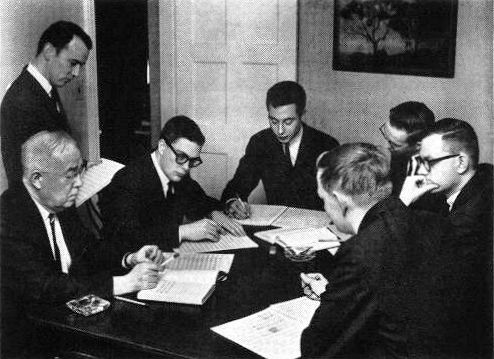
Sowerby (left, sitting) with some of his students.
Source: Cedille Records CD (My rip!)
Formats: FLAC (RAR), DDD Stereo, mp3(320)
File Sizes: 241 MB / 138 MB (FLAC version incl. cover & booklet)
Download Link – [Add to my reputation and send me a PM requesting the FLAC link!]
mp3 version – https://mega.nz/#!bUlxgRCR!OhXH7F4nLbHJRVTlSMLsEkEM4K-Izg7r0Wq9L5kpj3o
/>
Enjoy! Don’t share! Buy the original! Click on "Reputation" button if you downloaded this album! 🙂
It’s a fantastic recording.
A lot of thanks!
Modern: Tonal
These recordings were made within two years of composer William Mathias’s death (1992). Her conducted the works
on the first and supervised those on the second. Mathias wrote three symphonies and did so at the ages of 32, 49 and 57.
He completed the 3rd Symphony within a year of his death and after the recording sessions for the first disc. There is a
Sinfonietta which was initially called ???Dance Suite??? written in the same year as the First Symphony. The choice of works for
these two discs was apt and practically motivated. Until then only the First Symphony had been commercially recorded.
The Oboe Concerto was a recent work and Helios and Requiescat were needed to complete the discography of
Mathias???s sequence of single movement orchestral works.
Music Composed by William Mathias
Played by the BBC National Orchestra of Wales
With David Cowley (oboe)
Conducted by Grant Llewellyn
"The woodwind folk-dance segments of Helios (5.43) recall the Greek Dances of Skalkottas but also the more
ambiguous and nuanced potency of Gordon Crosse’s masterwork for oboe and orchestra Ariadne. There is a
violent edge to this music whose tramping rawness is suggestive of the Cretan Minotaur. Many years before
the same landscapes had inspired Carl Nielsen in his own Helios overture but the lambency of the Nielsen
piece is very different from the engulfing flood of exultant light and danger that lends rampant power to
Mathias’s Helios even if at the end it fades into a chiming mysterious Baxian haze that links Druidic Cambria
with Pagan Mediterranean pastures.
This brings us to Mathias’s three movement Oboe Concerto. It is here played with a sort of impudent
sweetness by David Cowley. The work was premiered by Sarah Francis for whom Ariadne had been written.
The Mathias work is not as challenging for the listener as the Crosse but it is a glorious work whether in its
cheerful lyricism or in its hypnotic and tender Baxian Adagio. The capering Vivace finale and for that matter
the first movement are somewhat reminiscent of the Oboe Concerto by Malcolm Arnold but a shade
more thorny.
The Third Symphony was a BBC commission and its first movement has the stamp of Stravinsky’s
Le Sacre and of the tricky pitched-blast opening of Tippett’s Second Symphony. The central Lento might
well remind you of one of Vaughan Williams long marches of Everyman perhaps suggestive of the
indomitable spirit of man in the Sinfonia Antartica. For me there is about this work a sense of the
ceremonial and invocatory. In the finale another aspect can be heard in the gaunt fanfaring that has
so much in common with the remorseless tread of William Alwyn’s Fifth Symphony Hydriotaphia on
the words of Sir Thomas Browne – an author also referenced by Mathias in Requiescat.
These recordings remain resplendent and detailed and achieve this regardless of the differing session
venues. I was very pleased to be asked to review this pair of discs which remind us of the debt we owe
to Nimbus. When they launched this series it may have seemed a left-field choice but the results repay
the listener in bell-haunted spells, enchanted coinage and sturdy Celtic magic."
Musicweb
Source: Nimbus Alliance CD (My rip!)
Formats: FLAC (RAR), DDD Stereo, mp3(320)
File Sizes: 267 MB / 165 MB (FLAC version incl. covers)
Download Link – [Add to my reputation and send me a PM requesting the FLAC link!]
mp3 version – https://mega.nz/#!PVskyJzS!ue_zUizViaJIk9to5F1NNaPoEps_9JMvEfRSxODbU2s
Enjoy! Don’t share! Buy the original! Click on "Reputation" button if you downloaded this album! 🙂
Modern: Neo-Romantic
Kurt Atterberg, one of the most profoundly gifted composers of his generation, made the symphony central
to his output, finally winding up with nine, just like Beethoven and Mahler, and all the while working at least two other
full-time jobs: electrical engineer and administrator of the Swedish composers’ society. He also had a side gig as an
internationally-known conductor. Atterberg’s Ninth Symphony is intriguing both in the composer’s attentiveness
to architecture and in his ambition. Ninth symphonies usually have composers looking back over their shoulder at
Beethoven. Even Shostakovich’s sardonic Ninth, looks back to that monument, if only to thumb its nose and grin.
One has trouble pinning down Atterberg’s Ninth. Is it cantata or symphony? Atterberg set sections of the Icelandic
Poetic Edda, emphasizing those parts relating to Ragnar???k, the Scandinavian pagan story of the end of the world.
You get bits of it in Wagner’s Ring des Niebel???ngen. In fact, "G???tterd???mmerung" (twilight of the gods) translates into
German the Old Norse "Ragnar???k" (fate of the gods). Their fate is not a joyful one. Odin, Thor, and the gang ???
they all get killed. Atterberg doesn’t give us anything like a classical symphony, and yet the music proceeds
symphonically. Symphonic narrative seems almost part of his DNA. Even so, one can see a lot of brainwork here,
most notably in the setting of the poetic refrains throughout the work. Each refrain gets its own music, which
recurs at each appearance of that particular refrain. The music in between differs but leads inexorably to the
refrain.
The tone poem ???lven ??? The River has its roots in Smetana’s Moldau. However, one notes significantly
different points of view. Smetana essentially builds from a single tune. Atterberg builds in little pieces, many of
which have nothing to do with one another. Also, Atterberg doesn’t describe the course of a particular river.
The river provides a metaphor, an excuse to sing about the Swedish landscape. The tone poem assumes, to
some extent, the manner of a travelogue ??? "Sweden: Enchanted Nature." It runs fairly loose, but it does impress
you with the sheer amount of invention in it. The episode as the river passes through a harbor town is especially
striking, as foghorns, buoys, sailor songs, and the sounds of the dock jostle one another ??? the kind of texture
Ives pioneered. However, everything else paints nature: rushing water, crashing waterfalls, still lakes, and,
finally, the open sea. One theme sort of runs through in various guises, but not in any obviously apparent
way and not all that strictly.
Music Composed by Kurt Atterberg
Played by the Radio-Philharmonie Hannover des NDR
With Satu Vihavainen (mezzo-soprano) & Gabriel Suovanen (baritone)
And the NDR Chor & Prague Chamber Choir
Conducted by Ari Rasilainen
"Having rattled off six symphonies by the time he was 40, the remaining 47 years of Atterberg???s life saw just
three more composed (and none at all in the final 18). Perhaps this slowing down was due to the international
attention accorded the Sixth ??? much of it negative ??? or the daunting challenge of Beethoven???s epic example.
For his choral Ninth, Atterberg found his ???big theme??? in the dangerous world of the Cold War, leading him to
create a symbolic, apocalyptic text derived from the Icelandic Eddas. The result is a single-span fusion of
symphony and cantata with little or no connection to Beethoven or traditional sonata forms.
But if its symphonic credentials are questionable, the Ninth???s internal cohesion is not. The interplay between
the two soloists, punctuated by interjections from the chorus (the orchestra, after a brief introduction have
just one extended interlude), in a sense takes the place of thematic sonata cut-and-thrust and the symphony
covers a wide range of moods during its eventful course. A truly vocal symphony, its performance here is
beautifully judged, caught in marvellous sound. Both soloists are excellent, though the laurels rest ultimately
with Rasilainen, whose tempi and pacing are perfection.
The symphonic poem ???lven (???The River???, 1933) was written five years after the Sixth Symphony. In outline
(too detailed to give here) it invites comparisons with Smetana???s ubiquitous river-poem Vltava, though there
are many differences between them. For one, Atterberg???s is much the longer of the two and rather more
diffuse: too much so in places, making its rhetoric somewhat overblown in tone. The North German Philharmonic
plays it lustily, but this never reaches the symphony???s ??? or Smetana???s ??? expressive heights."
Gramophone
Source: CPO Classics CD (My rip!)
Formats: FLAC (RAR), DDD Stereo, mp3(320)
File Sizes: 258 MB / 157 MB (FLAC version incl. covers)
Download Link – [Add to my reputation and send me a PM requesting the FLAC link!]
mp3 version – https://mega.nz/#!DUFXxAYK!cn66UjxNIurDveVyIc5lyMgUoozPN564reFGPDxJHEk
Enjoy! Don’t share! Buy the original! Click on "Reputation" button if you downloaded this album! 🙂
(donated by hg007bb)
Modern: Tonal
William Mathias’s description of the First Symphony is apt: a work of energy, colour and
affirmation. Here is positively blazes and rocks with a sanguine power which momentarily recalls Tippett’s
propulsive Second Symphony, William Schuman’s Third Symphony finale and the thrawn and rowdy
bustle of the Easter Fair of Stravinsky’s Petrushka. Earlier movements show the lavishly stocked and brooding
influence of Bax.
The Second Symphony might easily be dubbed ‘The Mystical’ or, given the Welsh DNA of the piece,
‘The Druidic’ or ‘Taliesin’. Mathias was always something of a magus when it came to the orchestra and had a
facility for rapidly grasping of atmosphere. The three movements glimmer and shimmer with the essence of Summer.
This is expressed through the easy-wheeling progress of the stars in a summer sky in the middle movement.
This process rises majestically from ease to effort in an antiphonal crest of brass fanfaring at 4:49
onwards (tr. 3). The all-conquering onrush of summer is expressed through the finale the score for which
carries the superscription: "My ark sings in the sun / At God speeded summer’s end / And the flood flowers
on." Throughout Mathias’s orchestration rings, chimes and peals through a world often noticeably indebted
to the Bax symphonies.
Music Composed and Conducted by William Mathias
Played by the BBC National Orchestra of Wales
"These recordings remain resplendent and detailed and achieve this regardless of the differing session venues.
Nimbus did not stop their Mathias mission with these two discs either. They have also recorded the Organ Music
(NI5367) and Choral Music (NI5243) ??? there???s more too.
I was very pleased to be asked to review this pair of discs which remind us of the debt we owe to Nimbus. When
they launched this series it may have seemed a left-field choice but the results repay the listener in bell-
haunted spells, enchanted coinage and sturdy Celtic magic."
Musicweb
Source: Nimbus Alliance CD (Not my rip!)
Formats: FLAC (RAR), DDD Stereo, mp3(320)
File Sizes: 234 MB / 155 MB (FLAC version incl. covers & booklet)
Download Link – https://mega.nz/#!KdEXACAA!WGz4a0toXax1Sw5j7egiI12Xhonv5oKF5SFxqBXSr0c
mp3 version – https://mega.nz/#!mUFSxRKS!4FC_tT5UfKKtgyyhOAdVQcLGlbgLxwaLlvIkE6AgTBc
Enjoy! Don’t share! Buy the original! Click on "Reputation" button if you downloaded this album! 🙂
Late Romantic (very late romantic)
Undeniably, Karl Ignaz Weigl and his music received more attention at the turn of the twenty first century than in the five
decades after his death, yet this belated appraisal was much less than a full-blown revival. With only one recording apiece for his
Symphony No. 5, "Apocalyptic" (1945) (which you can find >here (Thread 121898)<, and his Symphony No. 6 (1947), both in respectable
performances by Thomas Sanderling and the Berlin Radio Symphony Orchestra on BIS, Weigl’s symphonic output has
been seriously under-represented on CD, and his chamber works have received only slightly more recognition in a handful
of releases. Even so, Weigl’s music might have staying power with conservative audiences, and his acceptance among ardent
fans of the post-Romantic symphony is assured if they hear this disc. One attractive feature — or troubling, depending on
one’s tastes — is the striking similarity of Weigl’s music with Bruckner’s, insofar as it shares much of that composer’s radiant
tonal palette, four-square phrasing, expansive lyricism, and na???ve scene-painting; listeners may experience a pleasant feeling
of d???j??? vu when they hear this symphony, or reject it with disdain. Criticism for such blatant imitation is somewhat justified,
especially when the extremely late date of composition is taken into account; skeptics may well wonder how Weigl could
have passed off the Symphony No. 6 as an original work without being chided for its obvious derivativeness, until its
utter neglect is taken into account. This work was never played in Weigl’s lifetime and remained untouched until
rehearsals began for this recording, so Sanderling’s warmly sympathetic account with the BRSO is the first ever given
for the work.
Old Vienna (1939) also receives its world-premiere recording here, and it is vulnerable to the same complaints
as the symphony, especially because this potpourri of l???ndler and waltz themes comes perilously close to Bruckner’s
scherzo style, except for some occasional Straussian touches that make it sound a bit less simplistic. Yet lovers of the
"second golden age" of Austrian orchestral music will find the resemblances delightful and deem this piece a
wonderful discovery for its ample tunefulness and glowing timbres.
Music Composed by Karl Weigl
Played by the Rundfunksinfonie-Orchester Berlin
Conducted by Thomas Sanderling & Alun Francis
"If you liked Karl Weigl’s Fifth, then you’ll certainly enjoy his Sixth, though it strikes me as a marginally
less interesting work overall. The music positively reeks of that fin-de-si???cle ambiance familiar from composers
such as Mahler, Zemlinsky, Schreker, and Korngold, and if that’s your cup of tea then you don’t need to read
any further. Just buy it. The best movement, as in the previous symphony, undoubtedly is the adagio, a true
essay in “adagio style” as the late Romantic German school understood it. The finale also represents a natural
and successful culmination to the four-movement cycle. On the other hand, the first movement takes some
time to get going, and the scherzo lacks a certain bite–but this impression may change with repeated listening
(and the music certainly repays that).
Old Vienna, on the other hand, is a hefty (20-minute) chunk of nostalgic waltz music that does exactly what
the title implies. It’s quite wonderful–part ebullience, part decadence, scored with great sophistication, unlike
anything else of its type. In both cases conductors Thomas Sanderling and Alun Francis, along with the Berlin
Radio Symphony Orchestra, turn in excellent performances of music that sounds atrociously difficult to play
well. The strings in particular do some yeoman work, and sonically this is typically well-engineered, if perhaps
not quite at the state-of-the-art level we’ve heard on some other recent BIS releases (such as the Grieg
music for string orchestra SACD). Still, I can recommend this very worthy release without any hesitation
at all–a fine tribute to a serious and interesting composer."
Classics Today http://i1164.photobucket.com/albums/q574/taliskerstorm/p9r9_zpsfzemhzud.gif
Source: BIS Records CD (My rip!)
Formats: FLAC (RAR), DDD Stereo, mp3(320)
File Sizes: 273 MB / 136 MB (FLAC version incl. cover & booklet)
Download Link – [Add to my reputation and send me a PM requesting the FLAC link!]
mp3 version – https://mega.nz/#!7QcxHQqI!YzxgiC594bOt-9yq7zeQTcfw6iSiqGa8lJPwxtEoW3E
/>
Enjoy! Don’t share! Buy the original! Click on "Reputation" button if you downloaded this album! 🙂
Modern: Tonal/Wind Band
Fanfares and Overtures??? aptly conveys the spirit of this wide-ranging album, which marks the
d???but on Naxos???s popular Wind Band Classics range of the Rutgers Wind Ensemble. Hailed by one
critic as ???the Rolls Royce of wind ensembles???, it here presents music whose haunting moods, contrasting
compositional styles and sophisticated characters call forth both the ???sweet, sighing sonorities??? and
???impressive unanimity and sheer technique??? for which the Ensemble is renowned. Previous recordings have
gained the Ensemble an impressive 33 Grammy??? entry listings.
Music by H. Owen Reed, Karel Husa, William Schuman & V???clav Nelh???bel
Played by the Rutgers Wind Ensemble
Conducted by William Berz
"Husa???s ???Music for Prague 1968??? is by far the best piece of music here, and has an extremely dramatic ending???
???Music for Prague 1968??????is such a great work, up there with Grainger???s ???Lincolnshire Posy??? to be considered
among the best pieces ever written for the medium. It has a very specific message to communicate???read the
liner notes???and communicate it does, with extraordinary power. Multiple listens are a good idea, too. Anyone
who thinks only of Sousa marches, light fare and half-baked orchestral transcriptions when they hear the words
???band music??? needs to hear this piece???The Schuman, which closes the disc, is a strong and engaging piece???I???m
a big fan of the Naxos Wind Band Classics series, and they???re not kidding when they call this album ???wide-
ranging???. And there are certainly pleasures to be had here: the band plays very well. In particular, the
trumpets, as you might expect, are excellent."
Musicweb
Source: Naxos CD (My rip!)
Formats: FLAC (RAR), DDD Stereo, mp3(320)
File Sizes: 327 MB / 150 MB (FLAC version incl. covers & booklet)
Download Link – [Add to my reputation and send me a PM requesting the FLAC link!]
mp3 version – https://mega.nz/#!zIlCFaAT!GIXZAtcCVb5067Y4WjHLA2AOMSamgZsXHi1kZnTAHd8
Enjoy! Don’t share! Buy the original! Click on "Reputation" button if you downloaded this album! 🙂
Sorry, no new postings and link messages for the next 10 days! 😉
thank you so much
Thank you very much!
I second the recommendation … a very enjoyable collection.
Modern: Tonal
One of the most significant projects of Mieczysław Weinberg???s later years was his symphonic trilogy
On the Threshold of War. Symphony No. 17, which bears the dedication ???In memory of the fallen
in the Great Patriotic War???, is the largest-scale of the three and a probing work of considerable depth and
unforgettable power. Symphonies Nos. 18 and 19 can be heard on Naxos 8.573190 and 8.572752. With its
eloquent themes and ready climaxes, the Suite is one of Weinberg???s most intriguing scores to have
survived the difficult early 1950s. This performance is thought to be both the first of the work and the
first recording.
Music Composed by Mieczyslav Weinberg (Moisei Vainberg)
Played by the Siberian Symphony Orchestra
Conducted by Vladimir Lande
"Naxos are playing a vital part in the bringing to our attention the music of the Polish-born Mieczysław Weinberg,
a composer who had a mixed career in Russia. He was befriended by Shostakovich on his arrival in Moscow, but
unlike his famous dissident, Weinberg opted for a more accommodating relationship with the Soviet authorities after
having survived a period of imprisonment for ???Jewish subversion???. The present disc in a microcosm of that mixed
life, the Suite for Orchestra being a spin-off of the populist music produced by Shostakovich, its five vivacious
movements a gift for any ballet company. The Seventeenth Symphony, dating from 1982 is subtitled ???Memory???,
comes from a period when Russians were beginning to enjoy a greater artistic freedom, the score not rejoicing
at the Russian victory in the Second World War, but of the horror than and since. The opening movement is
tortured, full of misery and sadness, a mood hardly relieved in the following allegro, before Weinberg launches
into a scherzo of pure war-torn conflict. All these many scenes return in a finale of fast flowing change, the
ending one of emotional turmoil. It may not rank with the symphonies of Shostakovich, but this is a most
important Russian-generated twentieth-century score. The playing of the Siberian orchestra under their
conductor, Vladimir Lande, is quite stunning and offers one of the most persuasive discs of Weinberg I have
yet encountered, the release coming as part of Lande???s projected seventeen disc series of music by Weinberg.
The sound quality has excellent detail, dynamic range and impact. I hope Naxos will frequently revisit
the orchestra."
David’s Review Corner
Source: Naxos CD (My rip!)
Formats: FLAC (RAR), DDD Stereo, mp3(320)
File Sizes: 288 MB / 153 MB (FLAC version incl. covers & booklet)
Download Link – [This is a new album, please request the mp3 & FLAC links by PM!]
Enjoy! Don’t share! Buy the original! Click on "Reputation" button if you downloaded this album! 🙂
Modern: Tonal
The Great Animal Orchestra, Symphony for Orchestra and Wild Soundscapes by English composer
Richard Blackford and wild soundscape recordist Bernie Krause combines the sounds of
the natural world with the traditional sounds of the orchestra. Throughout the five movement
symphony Gibbons, Humpback Whales, Pacific Tree Frogs, Mountain Gorillas, Beavers and the Musical
Wren can be heard. For more information please visit: thegreatanimalorchestrasymphony.com
The Great Animal Orchestra Symphony is coupled with a new reorchestration of Saint-Sa???ns’
Carnival of the Animals by Richard Blackford for Symphony Orchestra.
Music by Richard Blackford & Camille Saint-Saens
Played by the BBC National Orchestra of Wales
Conducted by Martyn Brabbins
"I have never heard anything quite like this symphony, but, then, there has never been anything quite like
this symphony…This music speaks with great eloquence, authority and immediacy, but not only on behalf of
human beings: it speaks also for the natural world, casting light upon humanity???s often less than felicitous
relationship with our fellow creatures."
Gramophone, July 2014
"The result is stunning. Each of the five movements begins with a tape of the natural soundscape of a particular
region or continent after which the orchestra takes over. Gibbons and the humpback whale feature in the first
movement, while the scherzo is based on a chorus of Pacific tree frogs and a woodpecker. With its infectious
percussion and jazz rhythms this section is both accessible and appealing. The march and charge of a herd of
African elements brought moments of high drama to the evening, one of the stars of which was the Musician
Wren from Central America whose intricate 44 note melody formed the basis of the concluding theme and
variations. The ever-reliable Martyn Brabbins steered the excellent BBC National Orchestra of Wales
through Blackford’s ingenious score with great aplomb."
Gloucestershire Echo
Source: Nimbus Alliance CD (My rip!)
Formats: FLAC (RAR), DDD Stereo, mp3(320)
File Sizes: 269 MB / 186 MB (FLAC version incl. covers & liner notes)
Download Link – [Add to my reputation and send me a PM requesting the FLAC link!]
mp3 version – https://mega.nz/#!CElxlTgK!bStqE7RUwe8KEHys8WJ_5CQvwdkJpw7_9H5qlukWL-Q
Enjoy! Don’t share! Buy the original! Click on "Reputation" button if you downloaded this album! 🙂
Modern: Tonal
The Great Animal Orchestra, Symphony for Orchestra and Wild Soundscapes by English composer
Richard Blackford and wild soundscape recordist Bernie Krause combines the sounds of
the natural world with the traditional sounds of the orchestra. Throughout the five movement
symphony Gibbons, Humpback Whales, Pacific Tree Frogs, Mountain Gorillas, Beavers and the Musical
Wren can be heard. For more information please visit: thegreatanimalorchestrasymphony.com
The Great Animal Orchestra Symphony is coupled with a new reorchestration of Saint-Sa???ns’
Carnival of the Animals by Richard Blackford for Symphony Orchestra.
Music by Richard Blackford & Camille Saint-Saens
Played by the BBC National Orchestra of Wales
Conducted by Martyn Brabbins
"I have never heard anything quite like this symphony, but, then, there has never been anything quite like
this symphony…This music speaks with great eloquence, authority and immediacy, but not only on behalf of
human beings: it speaks also for the natural world, casting light upon humanity’s often less than felicitous
relationship with our fellow creatures."
Gramophone, July 2014
"The result is stunning. Each of the five movements begins with a tape of the natural soundscape of a particular
region or continent after which the orchestra takes over. Gibbons and the humpback whale feature in the first
movement, while the scherzo is based on a chorus of Pacific tree frogs and a woodpecker. With its infectious
percussion and jazz rhythms this section is both accessible and appealing. The march and charge of a herd of
African elements brought moments of high drama to the evening, one of the stars of which was the Musician
Wren from Central America whose intricate 44 note melody formed the basis of the concluding theme and
variations. The ever-reliable Martyn Brabbins steered the excellent BBC National Orchestra of Wales
through Blackford’s ingenious score with great aplomb."
Gloucestershire Echo
Source: Nimbus Alliance CD (My rip!)
Formats: FLAC (RAR), DDD Stereo, mp3(320)
File Sizes: 269 MB / 186 MB (FLAC version incl. covers & liner notes)
Download Link – [Add to my reputation and send me a PM requesting the FLAC link!]
mp3 version – https://mega.nz/#!CElxlTgK!bStqE7RUwe8KEHys8WJ_5CQvwdkJpw7_9H5qlukWL-Q
Enjoy! Don’t share! Buy the original! Click on "Reputation" button if you downloaded this album! 🙂
Hello wimpel69,
What a great share with this program of works by Richard Blackford !
Until today, I had never heard of this excellent composer… thanks to you I could discover his great talent not only as a composer but also as a first-rate orchestrator !
What a beautiful, powerful, respectful and new vision of Camille Saint-Sa???ns’ Carnival of the Animals !
Would it be possible to get the FLAC link to this beautiful music ?
Many thanks in advance and, once more, BRAVO !!! 🙂 🙂 🙂
🙂 🙂 🙂
Many thanks, one more time, dear wimpel69, to offer the HUGE repertoire you deliver us day after day !!!
All the best !!!
No.1081
Modern: Tonal
From Ralph Vaughan Williams???s earliest compositions to the works written near his death in 1958, this
new release from Albion, Discoveries, explores his lesser known works from top to bottom. All of
the works here are world premiere recordings. Modern composers have jumped on board to make this project a reality.
Anthony Payne has orchestrated Numbers I and II of the Three Nocturnes for Baritone and Orchestra, as well
as Four Last Songs for Mezzo-Soprano and Orchestra, and celebrated arrangers Adrian Williams and Philip Lane
have also contributed. Two of Britain???s finest singers are featured on this release, Roderick Williams and Jennifer
Johnston. These artists are joined by the BBC Symphony conducted by Martyn Brabbins. This project was made
in conjunction with BBC Radio 3. The Financial Times named Jennifer Johnston the ???Face to Watch in Opera,??? and she was
called by both the Observer and BBC Music Magazine ???a rising star.??? She is a graduate of Cambridge University as well
as the Royal College of Music, and has appeared in operas at the Teatro alls Scala, Salzburg Festival, Opera de Lille,
and many more. Roderick Williams has appeared as a soloist alongside the Scottish Opera, English National Opera, and at
The Royal Opera House. In September 2014, he was a featured soloist at the Last Night of the Proms.
Music Composed by Ralph Vaughan Williams
Played by the BBC Symphony Orchestra
With Roderick Williams (baritone) & Jennifer Johnston (mezzo-soprano)
Conducted by Martyn Brabbins
"Conductor Martyn Brabbins was slow to establish a presence outside of England and Scotland, though he
did make a significant mark through recordings not in standard repertory, but largely in music of contemporary
Scottish composers and as one of the main conductors involved in Hyperion’s extensive Romantic Piano Concerto
series. A self-described late starter, Brabbins attended Goldsmith’s College; he played in brass bands, but had
little other performing experience before studying conducting with Ilya Musin at the Leningrad Conservatory
from 1986 to 1988. Upon his return to England, Brabbins won the 1988 Leeds Conductors Competition. His
professional debut came that year as a last-minute substitute with the Scottish Chamber Orchestra. Within
a few years, Brabbins had guest-conducted all the BBC orchestras and major and minor ensembles throughout
England and in Ireland. From 1994-2005, he was the associate conductor of the BBC Scottish Symphony
Orchestra, and later added to his schedule the job of principal conductor of the contemporary music group
Sinfonia 21. Brabbins expressed particular enthusiasm for "anything after Beethoven," especially such Russian
composers as Tchaikovsky and Rachmaninov. He has also landed many opera engagements, mainly with
England’s lesser houses, conducting works ranging from Mozart standards to Bliss’ The Olympians and
Tchaikovsky’s The Slippers. In 1997, he conducted the first commercial recording of Korngold’s Die Kathrin.
Britten on Film In 2009, he was named guest conductor of DeFilharmonie and was artistic director of the
Cheltenham Music Festival between 2005-2007. He was name chief conductor for the Nagoya Philharmonic
as of 2013. His recorded efforts include a disc of Cyril Scott works with the BBC Philharmonic Orchestra (2004),
Bax (2004), and Britten on Film (2009)."
Source: Albion Records CD (My rip!)
Formats: FLAC (RAR), DDD Stereo, mp3(320)
File Sizes: 277 MB / 156 MB (FLAC version incl. covers & booklet)
Download Link – [This is a new album, please request the mp3 & FLAC links by PM!]
Enjoy! Don’t share! Buy the original! Click on "Reputation" button if you downloaded this album! 🙂
Modern: Neo-Classical
Paul Ludvig Irgens-Jensen (1894???1969) was a Norwegian twentieth-century composer. Irgens-Jensen studied piano
with Nils Larsen while a philology student at the University of Oslo. He began composing in 1920, and the radical nature of
his work attracted some interest. Irgens-Jensen’s oratorio Heimferd (for solo choir and orchestra) won first prize in a
national competition, and is considered a national monument of sorts for Norway. The song Altar is one of his most familiar works.
During the Second World War, Irgens-Jensen composed several songs and orchestral works to patriotic texts; due to the restrictions
imposed by the Nazis, these works had to be distributed anonymously and illegally. Irgens-Jensen is often characterized as a
neo-Classical composer.
Irgens-Jensen???s music stands at the confluence of Brahms and Grieg with an accent on light-filled textures and adroitly
calculated orchestration. In the inventive, dignified, peace-saturated and spry Tema con Variazioni there are moments
that nod respect to Tchaikovsky, Glazunov and Delius. Norwegian pastoral atmosphere is immanent. The four movement
Partita Sinfonica is drawn from Irgens-Jensen???s music for the play "Driftekaren". Its little Lento (II), complete with
honeyed violin solo, slowly smiles its way through a warm Norwegian evening. That radiance returns for the finale.
The Air touchingly inhabits the same Delian westering sun territory as the Lento. The Suite Kong Baldvines Armring is
rustic. It features open-air echoes of Holst and Grieg, a noticeable role for piano and some Middle-Eastern references.
The two-movement 1942 Symphony breaks away from rustic pictures no matter how ecstatic. Instead it embraces the
surgingly violent spirit of the times though not to the same epic degree as the Benjamin symphony. The music is troubled yet
finds time to turn to the solace of a Copland-like peace. At the end we encounter a Sibelian triumph. This is redolent of the
Finnish composer???s Fifth Symphony, written in the midst of another world war. The Rondo marziale was the original
finale of the Symphony. It???s at first introspectively elegiac and sour. The music centres around Bergian gloom and lichen-
draped Baxian regret. It then sloughs this off for a more grimly martial style before sinking back into those mangroves.
It is typical of Irgens-Jensen that the final pages muse resignedly around one of those idyllic Norwegian folk-tunes.
Lastly the 1927 Passacaglia is a grand set of variations in the viscous grandeur established by Bach through
Reger and Stokowski.
Music Composed by Ludvig Irgens-Jensen
Played by the Trondheim Symphony Orchestra
Conducted by Eivind Aadland
"Had he written more music, Norwegian Ludvig Irgens-Jensen would be considered a great composer today.
I have no doubt about it. This two-disc set contains most of his orchestral music without voices, and it???s
glorious. Start with Disc 2, containing his single symphony, plus the Passacaglia. Self-critical to a genuinely
unproductive degree, Irgens-Jensen separated the finale from the symphony???s first two movements and gave
it a separate title: Rondo marziale. That is how it is presented here, although with the original ending of the
second movement. Bjarte Engeset???s Bournemouth performance, recently issued on Naxos, employs the
revised ending of the second movement and identifies the finale as such. The differences aren???t important,
but I marginally prefer Engeset???s recording both for the marginally more powerful Bournemouth Symphony,
and the more vivid engineering (although this one really is very good).
That said, I recommend this set enthusiastically for the first disc alone, containing the Theme and Variations,
the Suite from King Baldwin???s Armlet, the tiny Air (an arrangement from the song cycle Japanese Spring),
and the Partita Sinfonica, one of the most beautiful pieces of music by anyone. Have a listen to a few
seconds of the slow finale (sound sample). It???s really special, and we have badly needed a new recording
of a work that ought to be as popular as just about anything. It may be that Naxos will issue more
Irgens-Jensen with Engeset, but there???s no reason to wait. He???s a composer whose music is rich
enough to stand duplication???a bit like Manuel de Falla in that respect???exhibiting such a high level
of craftsmanship and ravishing beauty that you can accumulate the same stuff virtually forever
without guilt. Eivind Aadland and the Trondheim Symphony do him proud. You???ll love this."
Classics Today http://i1164.photobucket.com/albums/q574/taliskerstorm/p9r9_zpsfzemhzud.gif
Source: CPO Classics CD (My rip!)
Formats: FLAC (RAR), DDD Stereo, mp3(320)
File Sizes: 566 MB / 297 MB (FLAC version incl. covers)
Download Link – [Add to my reputation and send me a PM requesting the FLAC link!]
mp3 version – https://mega.nz/#!PMN0SIYZ!d_RVcAPo3CzOYX0nT2WLuMpUyx_CLOsYbMJSfPgdpXM
Enjoy! Don’t share! Buy the original! Click on "Reputation" button if you downloaded this album! 🙂
Late Romantic
By the time of his death, at the age of 91, Josef Bohuslav Foerster had become the grand old man of Czech music.
Written under the spell of Bruckner and Mahler, the Symphony No.4 is widely regarded as his masterpiece. This deeply
religious work begins with a Mahlerian march, followed by a bucolic scherzo that would be at home among Dvoř???k???s Slavonic
Dances.The lovely slow movement provides yet more evidence of Foerster???s superb ear for orchestral colour while the
finale, the longest and most complex of the four movements, builds inexorably to a majestic climax that has been likened
to approaching the gates of heaven.
Music Composed by Josef Bohuslav Foerster
Played by the Slovak Radio Symphony Orchestra
Conducted by Lance Friedel
"Foerster???s Fourth Symphony is one of the best-kept secrets of Czech music. Composed, like its two
companions on this CD, during the early part of Foerster???s stay in Vienna, it shows the influence of Bruckner
and Mahler. It is a long work, some 47 minutes in length, and of striking quality. Its Scherzo is worthy of
Dvoř???k himself and is among the most captivating movements of its kind composed anywhere at this period.
The opening of the work has great nobility and depth, and it leaves the listener in no doubt that this is a
symphony of real substance. It is surpassed in its quality of inspiration only by Suk???s Asrael. The Festive
Overture of 1907 and the somewhat earlier Op. 44 symphonic poem, My Youth, are both first recordings
and are well worth a place in the repertory. The American conductor Lance Friedel is obviously committed
to this music and gets a very good response from the Slovak orchestra. Recommended with enthusiasm."
Penguin Classical Guide ***
Source: Naxos CD (My rip!)
Formats: FLAC (RAR), DDD Stereo, mp3(320)
File Sizes: 308 MB / 164 MB (FLAC version incl. covers & booklet)
Download Link – [Add to my reputation and send me a PM requesting the FLAC link!]
mp3 version – https://mega.nz/#!zJUy2LxB!-PDXeSVZhUCyF5jgzutRBZoIelGa_wsok3tInicFsp8
/>
Enjoy! Don’t share! Buy the original! Click on "Reputation" button if you downloaded this album! 🙂
Modern: Tonal
Composer-conductor Jos??? Serebrier (*1938) reflects on some of the works on this album:
"The Third Symphony is in the traditional four-movement format, but here the tradition ends. The opening
is a rather brash, aggressive moto perpetuo, the only fast movement in the work, with obsessive, repeated rhythms.
The Slavic-sounding melody of the second subject reappears throughout the other movements in several disguises,
not necessarily as a leitmotiv, but as a memory of things past. The opening is in the simple a-b-a format, while the
rest of the movements are quite rhapsodic. The second movement opens with a long cello line, which builds a dark
climate using the minimal diatonic interval, a semitone, sometime broken across octaves. A haunting high violin
line intercedes, like a voice from afar. It leads to succeeding interludes that have a feeling of unresolved conflict,
ending quietly and questioningly. The third movement is also a fantasy or rhapsody like the previous one, but
very different in character. It opens quietly with the second violins, soon joined by the violas, and followed by
anxious, anguished sounds. It is eventually interrupted by a sad, cryptic waltz. This waltz keeps returning
obsessively, over and over. Eventually it gives up, and the movement ends in resignation. The finale is
perhaps the main reason for the subtitle. After a short introduction, again based on the second motive of
the first movement, it changes character, leading to a repeated drone, like a passacaglia, serving as the
backdrop for a distant voice, a disembodied sound, wordless and mystical. Echoes of that same recurrent
second motive from the first movement make their final ghostly appearances, hidden under the string ostinato.
It seems to have an outer- worldly character.
The Elegy for Strings (1952) was first performed in Belho Horizonte, Brazil, conducted by my composition
teacher, Guido Sant???rsola. I did not hear that performance, but I was present when he conducted it in Montevideo
a few weeks later. To this day I recall a local critic writing that he enjoyed this dark, brooding piece, but that it
had to be impersonal, because it seemed inconceivable to him that a fourteen-year-old boy living in Montevideo
could write such sad, dark music. The Elegy was a first in many ways for my beginnings as a composer. It was
my first published composition.
Shortly after my arrival in the United States I started my studies with Aaron Copland, and it was he who suggested
the title for the enigmatic Momento psicol???gico (1957). I had mentioned to Copland the motive behind
this work: ???There is that crucial moment in life when you must decide whether to make a left or a right turn, and
that choice can shape your destiny.??? Copland replied: ???It???s a fateful, psychological moment.??? Scored for string
orchestra, there is also a distant trumpet sound ???just one note??? always present, sometimes whispering,
sometimes screaming.
During my first years with Stokowski???s American Symphony Orchestra in New York I was still writing music
regularly, mostly encouraged by him and some of his best musicians. Stokowski had assembled an orchestra
with some of the best free-lance virtuoso musicians in the New York area. Two of the star performers were
Paul Price, who commissioned my Symphony for Percussion for his Manhattan Percussion Ensemble,
and Davis Shulman, who commissioned a work for trombone and strings. The Variations on a Theme
from Childhood (1963) can be performed on trombone or bassoon. It requires a virtuoso of great
technique. The strings are also stretched to the limits, with extremely high writing."
Music Composed and Conducted by Jos??? Serebrier
Played by the Toulouse National Chamber Orchestra
With Carole Farley (soprano) & Yi Yao (accordion)
"All of Serebrier???s music displays a sense of drama and flair for the unexpected. Symphony No.3, for strings
and soprano vocalise (here presented with stylish spookiness by Serbrier???s wife Carole Farley), begins with
a frantic movement that sounds a bit like the second movement of Shostakovich???s Eighth Quartet. At the
movement???s center the work???s ???motto??? theme appears, and it is this tune that will be developed as the work
proceeds. The second movement is an elegiac chant largely for cellos, with some Bart???kian nocturnal
atmospherics toward the end. The next part is a wistful rhapsody with waltz interludes, while the
marvelous ???film noir??? finale introduces the solo soprano to haunting effect. It???s a fine work, and under
the composer???s direction we can assume that it???s played as well as it can be by the forces to whom it is dedicated.
The other major works sustain the overall impression of high quality composition, particularly the evocative
Fantasia for strings (one of Serebrier???s best known pieces, to the extent that any of them are). Perhaps most
impressive is the Passacaglia and Perpetuum Mobile for accordion and chamber orchestra, a piece that risks
sounding simply stupid but that here emerges as completely successful, the solo part effortlessly and
naturally integrated into the instrumental tapestry. The other works range from the darkly expressionistic
Momento psicol???gico to the comparatively jocose Variations on a Theme from Childhood???and all of them
reveal Serebrier???s innate feeling for instrumental color and shapeliness of form. Excellent sonics round
out this very enjoyable and rewarding musical portrait."
Classics Today
Source: Naxos CD (My rip!)
Formats: FLAC (RAR), DDD Stereo, mp3(320)
File Sizes: 315 MB / 179 MB (FLAC version incl. covers & booklet)
Download Link – [Add to my reputation and send me a PM requesting the FLAC link!]
mp3 version – https://mega.nz/#!vJFxFYSb!RAwXOq6Z9U6BJm7a_t0k3f079kX1k091thajkzI_Qls
Enjoy! Don’t share! Buy the original! Click on "Reputation" button if you downloaded this album! 🙂
Modern: Tonal
Two symphonies (out of five at the time that this album was released) by Irish composer John Kinsella (*1932),
who spent decades as an official – and finally head – of Radio Telefis Eirann before he devoted
himself exclsuively to composition after turning 56. The music is not as regressive as the rather
innocuous titles of the symphonies – and the conventional designations of the individual movements –
seem to suggest. There are tempestuous and atmospheric passages aplenty – but the lnguage is primarily tonal.
Music Composed by John Kinsella
Played by the RT??? National Symphony Orchestra of Ireland
Conducted by Proinns???as O’Duinn
"Dubliner John Kinsella (b.1932) was formerly Head of Music at Radio Telefis Eireann before resigning in 1988 in
order to devote more time to composition. Completed in April 1990 and premiered in September the following
year, Kinsella???s Third Symphony (he has written five to date) boasts an unusual formal scheme, comprising two
main movements (a Scherzo and Adagio tranquillo) framed by three much briefer ones (a Prologue, central
Intermezzo and Epilogue). The doleful solo bassoon cantilena that launches the work (and which reappears at
key points throughout) momentarily put me in mind of the start of Bax???s Third Symphony. Likewise, Kinsella???s
own readily approachable Third displays a slumbering organic power, pantheistic wonder and bracing, out-of-door
ruggedness that cast a strong spell, though his harmonic and orchestral palette are altogether leaner than Bax???s.
Anyone who responds to the symphonies of Lilburn or Tubin will recognize a kindred spirit in the transparently
scored Presto giocoso second movement (heavy brass are held back until some five minutes in), while the finely
sustained slow movement (which is reached by way of a melancholic Intermezzo) combines a Sibelian chill with
Shostakovich-like anguish. (Listen, too, for some eloquent saxophone writing in this thoughtful essay.) The
terse Epilogue juxtaposes the lonely bassoon idea against ever more insistent reminiscences of earlier material,
until a scampering codetta signals the end.
Of his substantial Fourth Symphony (1991, but revised two years later) Kinsella himself writes: ???The general
idea was to sketch some impressions of the four Irish provinces in the order in which they are likely to be
touched by the prevailing South-West wind: Munster, with its high peaks and broad fertile grasslands; Connacht,
with contrasts of warmth of feelings and sharply etched horizons; Ulster, where human tragedy overshadows
all other impressions; and Leinster, where there has been such strong centralization. The outline of this
scheme has been retained to the extent that it has given a certain character to each movement but, inevitably
in a symphony, structural and formal considerations predominate and the movements are bound together
by interrelated material and motifs.??? This is a more ambitious offering than its predecessor (a sizeable 45
minutes as against 30) and I found it less easy to assimilate on first hearing. That said, it does contain
some genuinely striking invention, not least in the uncompromising Scherzo, which is unnervingly ferocious
and serene by turns (try the last three minutes or so), and Kinsella???s communicative writing has more than
enough strength of purpose, epic breadth and doughty character to draw one back for further hearings.
Prionnsias O???Duinn and the National Symphony Orchestra of Ireland prove stylish, enthusiastic champions
of Kinsella???s music. The sound is vivid and true. Well worth exploring."
Gramophone
Source: Marco Polo CD (My rip!)
Formats: FLAC (RAR), DDD Stereo, mp3(320)
File Sizes: 262 MB / 186 MB (FLAC version incl. covers & booklet)
Download Link – [Add to my reputation and send me a PM requesting the FLAC link!]
mp3 version – https://mega.nz/#!aB8wXBoS!fQWTMrhE-tCeeROFXeZXVh_UM1QSQXz7TPrc3vtNKww
/>
Enjoy! Don’t share! Buy the original! Click on "Reputation" button if you downloaded this album! 🙂
Modern: Tonal
For the program notes, I’ll refer you to my earlier release, >No.37 (Thread 121898)<.
Music Composed by John Ireland
Played by the Hall??? Orchestra
Conducted by John Wilson
"Even at a time when so much British music from the first half of the 20th century is being rediscovered
and enthusiastically championed, much of John Ireland’s output remains out in the cold. But this attractive
compilation, sparkily performed by John Wilson and the Hall???, is exactly the kind of push Ireland’s reputation
needs. It includes A London Overture, the one work (apart from the occasionally revisited Piano Concerto)
that maintains a finger-tip hold on the repertory, alongside a clutch of more rarely heard scores. The most
interesting of them is the earliest, the tone poem The Forgotten Rite from 1913, a brooding, atmospheric
depiction of the pagan history of Jersey, which hints at other musical directions Ireland might have followed.
But by the time of the symphonic rhapsody Mai Dun, composed eight years later, that distinctive introspection
has coarsened into a robust, all-purpose ebullience. In the Satyricon Overture and the suite Charles Mackerras
assembled from the music Ireland composed for the 1946 film The Overlanders, the musical style is impersonal,
generic almost, though Wilson’s performances always have a panache about them."
The Guardian
Source: Hall??? CD (My rip!)
Formats: FLAC (RAR), DDD Stereo, mp3(320)
File Sizes: 303 MB / 155 MB (FLAC version incl. cover)
Download Link – [Add to my reputation and send me a PM requesting the FLAC link!]
mp3 version – https://mega.nz/#!TYV2TZ6B!Vrh4ymchr48JGhS6t9m2ysdC-KwmyA2UameecgZd_Hc
/>
Enjoy! Don’t share! Buy the original! Click on "Reputation" button if you downloaded this album! 🙂
And now I’m off for the weekend! 😉
Modern: Tonal
Since Blackford’s The Great Animal Symphony was so well-received, here is his cantata Voices of Exile.
Since so much film music these days – lamentably – includes choral passages, it’ll fit the bill, too. 😉
"In 1992 I recorded a 15-year-old girl refugee in the Kalighat slum area of Calcutta. Her village
had been destroyed by drought and she, like hundreds of thousands, lived on Calcutta???s streets.
When her family left her village they had to walk for days and consequently could take none of
their few possessions. All she could bring with her, she said, were her songs. For Kamla the songs
were her link with her village, her past and her culture ??? they represented a part of her dignity.
Although at the time I did not know it, I felt that one day I would write a work that would
incorporate Kamla???s beautiful song and the stories of others like her.
Thirteen years later the political debate on refugees and asylum seekers often seems to overlook
the fact that these people are individuals, not statistics or political footballs. Voices of Exile
makes no overt political point; it tries rather to give voice to a wide-ranging group of writers who
have suffered exile, prison, sometimes torture, and who can give an insight into the shared experience
of the refugee. It is an uncomfortable subject, yet one which, after being introduced to the work
of the Medical Foundation and Prisoners of Conscience in 2000, I decided to make the theme
of Voices of Exile." [Richard Blackford]
Music Composed by Richard Blackford
Played by The Philharmonia Orchestra
With Catherine Wyn-Rogers (mezzo-soprano) & Gerald Finley (baritone)
And Gregory Kunde (tenor)
The Bach Choir
Conducted by David Hill
"Richard Blackford???s Voices of exile stands firmly within this relatively recent tradition. Unlike the Britten War Requiem,
or other modern works like those by Karl Jenkins, it has no truck whatsoever with any religious texts ??? whether as ironical
counterpoint as in Britten, or as consolation as in Jenkins. It belongs rather in the same category as Michael Berkeley???s
early oratorio Or shall we die? with its specifically secular emphasis on the need for peace in the face of man???s inhumanity
to man. The texts are drawn from poems and texts on the subject of refugees drawn from sources all over the world, framed
by two poems of Tony Harrison. Like David Fanshawe???s African Sanctus it also makes use of taped voices. This could make
for a somewhat bitty impression but in the event the overarching theme lends a unity to the work even when the individual
contributions might seem disjointed. The very opening, with Tony Harrison???s Poetry after Auschwitz given a full-blooded
treatment with Gregory Kunde declaiming the text heroically over surging chorus and orchestra and a solo violin –
beautifully played. The review by BBC Music Magazine at the time of the original release in 2005 described this passage
as ???dramatically lumpish and melodically anonymous???. I fail to see this as justified by the music itself any more than
the ???thinness??? later on of which Terry Blain complained. The Bengali folksong on tape, which follows, is woven into
this texture with some very beautiful choral writing. This high standard is maintained afterwards in music of real
dramatic involvement and passion, for example in the heartfelt setting of the line ???How can I bear to look back????
during Part Two (track 6), sung with warmth by Gerald Finley.
The mezzo does not enter until the beginning of Part Three (track 9) but Catherine Wyn-Rogers has all the richness of
tone that one would expect from this excellent artist ??? and her diction is superb too. In the succeeding duet between
tenor and baritone (track 10) the parallels with Britten???s War Requiem are immediately apparent; although the rather
melodramatic colloquy lacks the still meditation of Wilfred Owen???s Strange meeting. The quotation of Blake???s Jerusalem –
with a direct ???lift??? from Parry???s setting – has a superb dramatic frisson. There is a similar melodramatic element in the
baritone solo which opens Part Four (track 12) but this is less effective despite Finley???s involvement in the text.
This is a momentary lapse soon redeemed by the Macedonian folksong setting which follows it. There the chorus
form a beautiful background to the recorded voice of Tanya Czarovska (track 13) and the solo violin playing in duet
with Wyn-Rogers (track 14) ??? the player really deserves a credit in the booklet. All the soloists are united in the
final section of Part Five. This is before the Epilogue (track 17) which provides a thrilling close to the work as a
whole in the setting of the poem Daughter of the desert by Antonio Joaquim Marques. This has a sense of ecstasy
which reminds this listener of Herbert Howells??? Hymnus Paradisi. After that the final setting of Tony Harrison
(track 18) provides a heart-rending coda.
The performance boasts three distinguished soloists who give of their very best throughout. The well-integrated
taped contributions add to the impact of the whole. The chorus, who presumably learned the score specifically
for this recording (the premi???re was given by the Bournemouth Symphony Chorus, who had commissioned the
work), sing with involvement, strength and security.
The recording is clear and reveals all the detailed strands in both choral and orchestral lines without lacking
resonance. Commendably this reissue from Nimbus supplies the listener with full texts – translated where
appropriate – and the original booklet note written in 2005 by the composer.
If this reissue helps to establish a work which seems to have been considerably underestimated at the
time of its original release, it will perform a real service."
Paul Godfrey, Musicweb
Source: Nimbus Alliance CD (My rip!)
Formats: FLAC (RAR), DDD Stereo, mp3(320)
File Sizes: 293 MB / 162 MB (FLAC version incl. covers & composer bio)
Download Link – [Add to my reputation and send me a PM requesting the FLAC link!]
mp3 version – https://mega.nz/#!eAsnHBJS!SVaIBN50RrJ64BxRiL4ct6f4-wfPX5IxDZ-LffEFbxI
/>
Enjoy! Don’t share! Buy the original! Click on "Reputation" button if you downloaded this album! 🙂
As always, FYI, no strings attached.
thank you for all the interesting music!
As always, FYI, no strings attached.
thank you for all the interesting music!
Unfortunately the Marco Polo pressings back in the day left much to be desired.
Modern: Avantgarde
Julian Anderson was born in London in 1967 and studied composition with John Lambert, Alexander Goehr and Tristan
Murail. His first acknowledged work, Diptych (1990) for orchestra, won the 1992 Royal Philharmonic Society Prize for Young
Composers. His two commissions for the London Sinfonietta, Khorovod (1994) and Alhambra Fantasy (2000), have been
performed by leading ensembles worldwide. His other most played works include the orchestral BBC Proms commission
The Stations of the Sun (1998) which has been performed by both the Boston Symphony and Cleveland Orchestras,
and the chamber work Poetry Nearing Silence (1997). He was Composer in Residence with Sinfonia 21 from 1996 to
2001 and Composer in Association with the City of Birmingham Symphony Orchestra (CBSO) from 2001 to 2005, for whom
he has written three orchestral works and Book of Hours for ensemble & electronics (for BCMG). His Symphony (2003) won
the BACS Award for the Best New Orchestral Piece the following year.
This disc represents Julian Anderson’s much-awaited recording d???but, featuring the premi???re recordings of five of his most
important works to date. Diptych (1990) was his first acknowledged work; it won the 1992 Royal Philharmonic Society
Prize for Young Composers and was subsequently nominated as the BBC entry in the 1996 International Rostrum of Composer
s in Paris. Anderson’s two commissions for the London Sinfonietta, Khorovod (1994) and Alhambra Fantasy (2000),
have been widely performed by leading ensembles across Europe and the USA. His other most played works include the orchestral
BBC Proms commission The Stations of the Sun (1998). A terrifying poem by W.B. Yeats, as well as the experience of a
lunar eclipse in March 1996 gave the inspiration to The Crazed Moon (1997), commissioned by BBC Wales.
Music Composed by Julian Anderson
Played by the BBC Symphony Orchestra & the London Sinfonietta
Conducted by Oliver Knussen
"The young British composer Julian Anderson has gained major performances and plenty of acclaim for his Book of
Hours and other compositions; this CD collects some of his earlier orchestral works in performances (all are reissued)
by a sympathetic conductor who has championed him, Oliver Knussen. Anderson uses, by his own description,
materials that are diatonic but not tonal. The Alhambra Fantasy of 2000 provided him with inspiration suitable to
his gifts. His style makes use of small motifs and planes of sound that are brought together and made to overlap.
Without the slightest reference to conventional aural images of Spain, Anderson forges a consistently compelling
11-minute structure that seems organically linked to the atom patterns of Islamic architecture. Dance is another
interest of Anderson — and again not in the usual way. You can’t tap your foot to his music, but hints of various
kinds of music intended for dancing come through in the other works on this album. These include Indonesian
gamelan music, which Anderson has studied intensively, incorporating its layers and cycles into his own music
but avoiding the gongs, the usual avenue of influence. The opening work, Khorovod (1994), manages to use
the intervallic repetitiveness of a Russian folk dance in a way that has little reference to nationalist idioms,
or even to Stravinsky. Built of simple materials, Anderson’s music is nevertheless challenging. A good
introduction to the work of this rising British composer."
All Music
Source: Ondine Records CD (My rip!)
Formats: FLAC (RAR), DDD Stereo, mp3(320)
File Sizes: 345 MB / 190 MB (FLAC version incl. cover & composer bio)
Download Link – [Add to my reputation and send me a PM requesting the FLAC link!]
mp3 version – https://mega.nz/#!3hNgGCRQ!22vILlZtpOFd4VBf-OIdYPB5q645q38OgFqy7Yyajjk
/>
Enjoy! Don’t share! Buy the original! Click on "Reputation" button if you downloaded this album! 🙂
Modern: Tonal
National Medal of Arts, Pulitzer Prize, and Grammy Award-winner William Bolcom (born May 26, 1938) is an American composer
of chamber, operatic, vocal, choral, cabaret, ragtime, and symphonic music. He joined the faculty of the University of Michigan’s School
of Music in 1973, was named the Ross Lee Finney Distinguished University Professor of Composition in 1994, and retired in 2008 after
35 years. Bolcom won the Pulitzer Prize for music in 1988 for 12 New Etudes for Piano, and his setting of William Blake’s Songs of
Innocence and Songs of Experience on the Naxos label won four Grammy Awards in 2005. As a pianist Bolcom has performed and
recorded his own work frequently in collaboration with his wife and musical partner, mezzo-soprano Joan Morris. Cabaret songs,
show tunes, and American popular songs of the 20th century have been their primary specialties in both concerts and recordings.
Their 25th album, "Autumn Leaves," was released recently on White Pine Records.
Music Composed by William Bolcom
Played by The Louisville Orchestra
Conducted by Lawrence Leighton Smith
"Born April 8, 1936, Lawrence Leighton Smith (died 2013) was one of the most respected American conductors
of the 20th and 21st centuries. His brilliant conducting career began in 1973 when he became a first prize winner
of the Dmitri Mitropoulos Competition. Smith went on to appear with nearly every major orchestra in the United
States and to tour internationally.
As music director of the Louisville Orchestra from 1982 to 1993, Smith earned international recognition for both
live performances and recordings. He also served as music director of the Austin, Oregon, and San Antonio
Symphonies. He became the first American conductor of record to conduct the Moscow Philharmonic, creating
the widely acclaimed ???Moscow Sessions??? recordings.
Known for his commitment to working with student musicians, Smith led many performances at the Yale School
of Music, as well as the Manhattan School of Music. During his ten years at Yale (1995???2004), he was the
music director of the Yale Philharmonia and the head of the conducting program. A native of Portland, Oregon,
Smith was also an accomplished pianist and started his music career as a piano soloist.
He began his conducting career at Tanglewood as a musical assistant to Erich Leinsdorf, also spending time
at the Peabody School of Music. He is a recipient of three honorary doctorates and, with the Louisville Orchestra,
fourteen ASCAP awards for adventurous programming. As music director of the Colorado Springs Symphony,
Smith was instrumental in the rebirth of the orchestra as the Colorado Springs Philharmonic in 2003.
He was succeeded by current music director Josep Caball???-Domenech."
Source: Louisville "First Edition" CD (My rip!)
Formats: FLAC (RAR), ADD Stereo, mp3(320)
File Sizes: 323 MB / 158 MB (FLAC version incl. covers & booklet)
Download Link – [Add to my reputation and send me a PM requesting the FLAC link!]
mp3 version – https://mega.nz/#!ess2hSAC!CA5hmInzePHt3_4tGsY0Fn1tm8mW7U1a-wiwZATn3KU
/>
Enjoy! Don’t share! Buy the original! Click on "Reputation" button if you downloaded this album! 🙂
Modern: Tonal ("Klassische Moderne")
The premiere of Zolt???n Kod???ly’s five-scene opera–actually, Singspiel H???ry J???nos, Op.15 at the Budapest Royal Opera
on October 16, 1926 was an unqualified success (Kod???ly still felt it necessary to continue work on the opera, however: a final
version didn’t appear until 1927), and Kod???ly wasted little time before drawing up a concert suite of its most colorful music.
The suite has six musical numbers, lasting about twenty minutes altogether, and requires a fairly standard large orchestra.
(Kod???ly also made an arrangement of it for brass band, and the famous Hungarian violinist Joseph Szigeti fashioned a version
for violin and piano.)
Beginning in 1905, Kod???ly began collecting folk songs, eventually notating over 4,000 examples and publishing landmark
scholarly articles on his discoveries. Among them was the gulf between authentic folk song, usually modal, and folk music
overlaid by popular European dance idioms spiced with flamboyant gypsy ornamentation – verbunkos music. Kod???ly’s family
moved to the village of Gal???nta before he was two and remained there for some seven years. Thus, when he was
commissioned for a work by the Budapest Philharmonic Society in 1933 to commemorate its 80th anniversary, Kod???ly
turned to his origins. Curiously, most of the material of Dances of Gal???nta is verbunkos-related, though its companion
piece, the Marossz???k Dances, employs authentic folk tunes. After an evocative flourish, a series of dances — the sultry
and insinuating giving way to the exhilarating and scintillant — brilliantly conceived in opulent, glowing orchestral sonorities.
The four movements of Gy???rgi Ligeti’s Concert Romanesc, played without separation and totaling only twelve
minutes???may be taken as a sort of autobiographical snapshot by the composer. ???I grew up in a Hungarian-speaking
environment in Transylvania,??? he wrote. ???While the official language was Romanian, it was only in secondary school that
I learned to speak the language that had seemed so mysterious to me as a child. I was three when I first encountered
Romanian folk music, an alpenhorn player in the Carpathian Mountains. . . .??? Ligeti here continues the tradition of such
works as Enescu???s Romanian Rhapsodies and Bart???k???s Rumanian Folk Dances, infusing the ???symphonic-folk??? tradition
with sounds that are both modernist and listener-friendly.
B???la Bart???k’s Two Portraits for Orchestra are not original compositions as such, but actually modified versions of
two other works by Bart???k. The first portrait is the first movement of his First Violin Concerto, which was only published
posthumously; Bart???k withdrew it in 1907 before its premiere. The second portrait is an orchestrated version of the
fourteenth of the Fourteen Bagatelles for piano (the piano version was composed in 1908, but was not orchestrated
for the Portraits until 1911). The first Portrait develops gradually, subtly, with the initial thematic statement made by the
solo violin. Other instruments are added one by one as the movement progresses, and scholars have likened the tender
swelling of the piece to the movement of waves. Textually, the first Portrait combines quasi-fugal moments with a
Debussyian, impressionistic harmonic stasis. The second Portrait differs radically in character from the first. It is a
wild dance, a Valse, subtitled "Une grotesque."
Music by Zolt???n Kod???ly, B???la Bart???k & Gy???rgi Ligeti
Played by the Gulbenkian Orchestra
Conducted by Lawrence Foster
"Only a really grumpy listener could fail to enjoy this. Here is a well-chosen potpourri of 20 th century
Hungarian and Romanian showpieces, some famous and others slightly off the beaten track. Zolt???n Kod???ly???s
Dances of Gal???nta get a reading of gratifying vigor and allure, his H???ry J???nos Suite is very satisfyingly
shaped, and shorter works by B???la Bart???k and Gy???rgy Ligeti provide a more balanced picture of the
nuances of the folk music movement.
Conductor Lawrence Foster, who, despite his very English name, has Romanian parents, is an energetic,
devoted exponent of this music. He and the Gulbenkian Orchestra, which he has led since 2002, work
together with flawless rapport: these are clearly artists thriving on each other???s presence. The Ligeti
concerto, the least familiar music on the disc, is also the most thrillingly alive. The sound picture is
wide and realistic (one can hear the violins divided), though it takes a while to adjust to the prominence
of the solo players. Bass is gratifyingly present. There???s a weird buzzing sound at the start of Bart???k???s
first Portrait, but it is nearly inaudible and goes away before the music begins. If the program intrigues
you – and, if you enjoy having fun, it should! – you have no reason whatever to hesitate.
A solid 75 minutes of pure pleasure."
Musicweb
Source: Pentatone Classics CD (My rip!)
Formats: FLAC (RAR), ADD Stereo, mp3(320)
File Sizes: 330 MB / 183 MB (FLAC version incl. cover & booklet)
Download Link – [Add to my reputation and send me a PM requesting the FLAC link!]
mp3 version – https://mega.nz/#!uwMzgaxB!p2ShbQ1pdkYWBrWDxUhY9YFlV_1iAE9aXqvV2diur9I
Enjoy! Don’t share! Buy the original! Click on "Reputation" button if you downloaded this album! 🙂
Thank you very much, wimpel69 for sharing this! It is an extraordinary album; the notes/comments you included in your post perhaps reflect my sentiments better than I can express them just now. I will absolutely be keeping an eye out for (and ear attuned to) future releases of Worthington’s work!
Impressionism
In contrast to his friend and fellow composer Manuel de Falla (six years older), Joaqu???n Turina was less interested in
mainstream European music and continued to write in the rich, colorful Andalusian style which most often is associated with
Spanish music. Danzas fant???sticas is a brilliant, wholly Spanish piece and Turina’s best-known work (there is also a piano version).
It is inspired by the novel "La org???a" by Jos??? Mas. The three movements have the following sentences from the book printed above
them: (1) "It seemed as if the figures in that incomparable picture were moving inside the claice of a flower." (2) "The guitar’s
strings sounded the lament of a soul helpless under the weight of bitterness." (3) "The perfume of the flowers merged with
the odor of manzanilla, and from the bottom of raised glasses, full of wine incomparable as incense, joy flowed."
Each of the dances is in a different style from a different Spanish tradition. The first is a jota from Arag???n, the second
is a Basque zortziko, and the third is an Andalusian farruca.
In 1941 Turina would make its first foray into film music upon being requested to score two short features. Two years later,
for the Spanish newsreel, NO-DO, he composed the score of "Seville Spring," to be followed by others. The first public
screening of "Seville Spring" took effect on October 15, 1943 at the Capitol Cinema, Madrid. In its symphonic form,
officially called Primera Sevillana, it is a suite of eight short numbers, as many as music sequences contained in the film.
Music Composed by Joaqu???n Turina
Played by the Orquesta Ciudad de Granada
Conducted by Juan de Udaeta
"As time passes, the controversies that adversely affected Joaqu???n Turina’s career and musical legacy
seem to have faded enough to allow at least a reappraisal of his oeuvre. But even though Turina’s politics
are no longer a hot-button issue, many of his works still seem unconvincing and hard to get excited about.
Skillfully orchestrated and brimming with melodies inspired by Spanish regional styles, Turina’s orchestral
pieces nonetheless present few intellectual challenges and seem quite tame and conservative when compared
to the revolutionary works produced by his contemporaries. Yet the public’s tastes have changed, and Turina’s
music has found a new audience, more sympathetic to his lush Romantic style and willing to excuse his
blandness and obvious sentimentality. Best known and appreciated for its vivid Spanish colors and lively
themes is the Danzas fant???sticas, Op. 22, Turina’s one bona fide hit, deservedly remembered for its bold
scoring and rhythmic vitality. The rest of this CD’s selections offer much of the same exotic flavors and
atmosphere of Danzas, though considerably less vigor and spice, and the listener may find them less
compelling. The Orquesta Ciudad de Granada, directed by Juan de Udaeta, plays with sumptuous
timbres and rich expression, and the sound quality is clear and natural."
All Music
Source: Claves CD (My rip!)
Formats: FLAC (RAR), ADD Stereo, mp3(320)
File Sizes: 245 MB / 143 MB (FLAC version incl. covers)
Download Link – [Add to my reputation and send me a PM requesting the FLAC link!]
mp3 version – https://mega.nz/#!9RhihZoQ!UR5WPPlEFLTY6cVAcIyBx3Vra1SRkdlU0aN7FKuhuCw
Enjoy! Don’t share! Buy the original! Click on "Reputation" button if you downloaded this album! 🙂
Modern: Tonal
Of his Symphony No.53, ???Star Dawn???, scored for concert band, composer Alan Hovhaness writes:
"The thought for the symphony initiated with a phrase from Dante, ???star dawn???, which suggested traveling in space.
Bells symbolize the stars, long flowing melodies create a sense of journey, and great chorales symbolize humankind.
My life-long interest in astronomy has suggested the thought and hope that we may colonize Mars. As we overcrowd
the Earth, we must eventually confront this issue. Mars, although cold, seems to have a climate which may make
this possible.??? The symphony is cast in two movements. The first commemorating the journey and the second,
arrival. Star Dawn was commissioned by Charles D. Yates, for his San Diego State University Wind Ensemble,
and was completed in 1983.
The Symphony No.29, scored for trombone and band, Op. 289, gives the fullest account of Hovhaness’
mildly atmospheric harmonies and melodically fluid style, a mixture of late Romantic tone-painting, Western
hymnody, and Eastern mysticism that runs throughout the work in a somber ecumenical procession. The solemn
intonations of trombonist Christian Lindberg and the organ-like sonorities under Keith Brion fully
convey Hovhaness’ devotional intentions.
Hovhaness’ The Flowering Peach is a concert suite drawn from incidental music written to accompany
the eponymous Clifford Odets play (a wry treatment of the biblical account of Noah’s ark). The suite, comprising
seven short movements, is scored for alto saxophone, clarinet, harp, and a variety of percussion instruments.
Although the work is obviously intended to complement to Odets’ conception, Hovhaness succeeds in maintaining
his own musical identity, utilizing the idioms and techniques–derived from early Christian, Armenian, and
Indian sources–that characterize his other works from the mid-1950s.
Music Composed by Alan Hovhaness
Played by the Ohio State Concert Band
With Christian Lindberg (trombone)
Conducted by Keith Brion
"Star Dawn is a late symphony in two movements and reflects the composer’s lifelong interest in astronomy
meshed with Dante Alighieri’s ‘Divine Comedy’. The smooth and hypnotic tone of the brass choir picks up
resonances with a lazily blown reveille to the star-rise on some very different world from our own. Also Sprach
Zarathustra and the hymnal aspect of Finlandia may also occur to you. The jazzy spate of the vibraphone
(4.57 in track I) provides contrast amid much unhurried smooth-contoured poetry suggestive of the
remoteness of Humbert Wolfe’s lonely ‘Betelgeuse’.
The trombone Symphony is in four movements in which the mood is predominantly slow and prayer-like
led by the bard-like ‘elder’ of the trombone with rest of the band attentive in their dedication and spirituality.
There are flurries of birdsong in the third movement and in the finale the affecting role for the contented
trombone seems on the edge of quoting some Caledonian song.
Clifford Odets’ play ‘The Flowering Peach’ retells the story of Noah’s Ark. The music is smooth flowing,
oiled by the voice of Noah as taken by the saxophone and by the conspiratorial whispering of the band.
The rain movement (without sax) is a simple drizzle of timpani, glockenspiel and harp.
The processional from Symphony No. 20 is a work of alternating Holstian gravity, Russian liturgy (Great
Gate of Kiev) and pert woodwind writing (Percy Grainger is a Brion speciality on DELOS DE3101) whose
grammar is defined by the tolling of bells and the metallic awe of gong strokes. There was room for the
whole symphony – our loss that it is not there.
A very recommendable disc."
Musicweb
Source: Delos Records CD (My rip!)
Formats: FLAC (RAR), ADD Stereo, mp3(320)
File Sizes: 245 MB / 141 MB (FLAC version incl. covers)
Download Link – [Add to my reputation and send me a PM requesting the FLAC link!]
mp3 version – https://mega.nz/#!5NpAFBZA!_3yuRt_itfRL2rPPTu9G9v2ALeNiOCt1l9rXMsX0NmA
Enjoy! Don’t share! Buy the original! Click on "Reputation" button if you downloaded this album! 🙂
Modern: Tonal/Impressionist
This release on the Hall??? label brings together a stunning collection of works inspired by the English landscape,
including the ever popular Tintagel and Norfolk Rhapsody No.1. Vaughan Williams???s hauntingly
beautiful The Lark Ascending is one of his most enduringly popular works, with its title taken from a poem by
George Meredith. This serene romance may seem simply and yet it is of considerable originality, capturing the idyllic
mood of a pre-1914 England. Also featured is Gerald Finzi???s rarely-performed minature tone poem,
The Fall of the Leaf. At Finzi???s death the piece, originally a piano duet, was only partly orchestrated and it
was left to his life-long friend, Howard Ferguson, to complete the score. The first performance of The Fall of the Leaf
was given by the Hall??? Orchestra under the direction of Sir John Barbirolli on 11 December 1957.
Music by [see above]
Played by the Hall??? Orchestra
With Lyn Fletcher (violin)
And the Hall??? Choir
Conducted by Sir Mark Elder
"The latest addition to Mark Elder and the Hall???’s steadily expanding survey of English music from the first
half of the 20th century is a delectable collection of tone poems and illustrative pieces. The selection is carefully
varied. Some of it is familiar enough, with the impressionist seascapes of Arnold Bax’s Tintagel, moving via
Vaughan Williams’s The Lark Ascending (with the Hall???’s leader Lyn Fletcher as the aerial soloist) and his
First Norfolk Rhapsody to Delius’s Summer Night on the River and On Hearing the First Cuckoo in Spring.
But there’s also Finzi’s less often played elegy for orchestra, The Fall of the Leaf, all that survives of a
projected triptych begun in the 1920s.
Also included are two pieces that give the Hall??? Choir their moment in the spotlight – an extract from
Elgar’s neglected cantata King Olaf and John Ireland’s setting of James Kirkup’s The Hills. All of the
performances are perfectly judged and the orchestral playing is predictably first rate."
The Guardian
Source: Hall??? CD (My rip!)
Formats: FLAC (RAR), DDD Stereo, mp3(320)
File Sizes: 261 MB / 167 MB (FLAC version incl. cover & booklet)
Download Link – [Add to my reputation and send me a PM requesting the FLAC link!]
mp3 version – https://mega.nz/#!5VBwgRwT!z8wZiKSQFnUE7qexz-PPHwuCj-RrxdO0hl13c3OjCpk
/>
Enjoy! Don’t share! Buy the original! Click on "Reputation" button if you downloaded this album! 🙂
Modern: Tonal
This Naxos album of Mikl???s R???zsa???s concert works presents music strongly reflective of the composer???s
Hungarian roots. In the Rhapsody for Cello, Hungarian melodic contours and themes can be clearly heard as the
music changes speed with almost dizzying speed. Hungarian Sketches is notable for the nocturnal evocation of the
countryside in the "Pastorale", which is followed by a peasant dance. The events of the 1956 Hungarian uprising had a
bearing on the character of R???zsa???s turbulent and angst-filled Concert Overture. The impressionistic Notturno
ungherese of 1963 opens with an evocation of the Hungarian countryside at sunset. Mark Kosower, the newly
appointed principal cello of the Cleveland Orchestra, has already made one outstanding recording of Hungarian music
for cello and piano for Naxos.
Music Composed by Mikl???s R???zsa
Played by the Budapest Symphony Orchestra M???V
With Mark Kosower (cello)
Conducted by Mariusz Smolij
"R???zsa???s four works in this disc cover a thirty-five year compositional span. The earliest is the 1929 Rhapsody,
which doesn???t appear to have been recorded before. The cello enters lightly, indeed, in an almost English fokloric
way???at points you might think this was Finzi, for example, in genial mood???though procedurally things are perhaps
more attuned to Bart???kian development and to the ethos of Bloch too. The little cadenza for the warm toned cellist
Mark Kosower is accomplished well, and the vivace close employs brisk rhythmic material, quite angular and
forward moving. It all makes for a somewhat unusual slice of R???zsa, but a very welcome one.
Just before the outbreak of World War 2, he completed the Three Hungarian Sketches; Capriccio, Pastorale and
Danza. The first is an energetic affair, again hinting at Bloch-like sonorities, obviously folk-based, and well
orchestrated. The pert wind writing is rather worthy of note. The Pastorale has considerable lyric depth and a
real beauty, full of colour and incident???a country idyll of memorable concision and sense of projection.
By contrast the last of the sketches is a fiery dance, with a full complement of bagpipe and fiddle drone,
the whole ensemble swirling away wildly. There???s a solo violin moment and chugging basses into the bargain.
The brassy canonic flourish, with which the Overture to a Symphony Concert opens, promises frisson. We get it,
but also more fractious writing too. Those little ascending, questioning lines and pounding brass and percussion
statements may, indeed, as the composer himself noted, reflect something of his own feelings about the
Hungarian Uprising of the previous year. But it???s not presented programmatically, though retrospectively one
may perhaps adduce the urgent trumpet calls to the prevailing political circumstances in the country of his
birth. Finally we have Notturno ungherese of 1963???64, which moves briskly from a sunset opening to a
powerful brass led procession.
The recording is first class and the performances sound committed, idiomatic and sharply attuned to the
composer???s sensibilities."
Musicweb
Source: Naxos CD (My rip!)
Formats: FLAC (RAR), DDD Stereo, mp3(320)
File Sizes: 242 MB / 132 MB (FLAC version incl. covers & booklet)
Download Link – [Add to my reputation and send me a PM requesting the FLAC link!]
mp3 version – https://mega.nz/#!QEhx0TIB!u9klL_tIbvMDXsM4ytbc4fHv4wv2BjEPuRbWhjAfSdk
Enjoy! Don’t share! Buy the original! Click on "Reputation" button if you downloaded this album! 🙂
thanks again
Modern: Tonal
The first concert work Mikl???s R???zsa wrote upon emigrating to the United States, the fraught
Concerto for String Orchestra may be heard as a lament for his disrupted Hungary. The melodies
all carry what the composer called a "Hungarian accent," and this work could be mistaken for dour Kod???ly or
unpercussive Bart???k. Intense lyricism suffuses the concerto, but it is the lyricism of Hungary rather than
Hollywood. The tough-minded first movement — Moderato, ma risoluto ed energico — contrapuntally develops
two brooding themes. These themes occasionally rise to vehemence within R???zsa’s sonata-allegro structure,
but avoid a really slashing intensity. The solo viola introduces the second movement — Lento con gran
espressione — with a haunting, folk-like melody. The feeling here is nostalgic, possibly elegiac, depending
on the performance. The viola, this time accompanied by solo cello, also ushers in the second theme, which
is much in the same mood and could be heard as a variation on the first motif. After a passionate climax,
pitting the violins against the massed violas, cellos, and basses playing in octaves, the music recedes into a
muted viola solo. The final movement — Allegro giusto — abounds with contrapuntal acrobatics. The main
theme, syncopated and dance-like, is carried by the violins, and calls to mind parts of Bart???k’s Divertimento
for Strings. The second theme, light-spirited if not exactly happy, is interrupted by a fugato episode
that rumbles out of the lower strings, initially like a minuet for curmudgeonly elephants. This material
builds gradually in texture and speed, and eventually even the first movement’s main theme weaves
its way into the finale’s counterpoint. The Concerto for String Orchestra, which is dedicated to the
composer’s wife, can accommodate a number of interpretations. It may validly be presented as a more
serious counterpart to Bart???k’s spirited, highly accessible Divertimento, or it may take on a special
urgency as a fierce musical essay on wartime Hungary. In any case, it speaks frankly and directly to a
wide audience.
B???la Bart???k’s 1939 Divertimento marks the end of Bartok’s European career. It was composed
on commission from Paul Sacher, the pioneering conductor who commissioned so much fine music for his string
orchestra in Basle, Switzerland. Bartok was then already planning to move to the United States to escape both
the gathering war clouds of Europe and the Nazi sympathizing regime of his native Hungary. He had already
sent his manuscripts and papers to London, but remained at home because of the terminal illness of his mother.
While taking a break from all this he visited Sacher in Switzerland and while there composed this substantial
(nearly 25 minute) work in 15 days. His mother died in December; Bartok finished up his personal affairs in
Europe, giving his farewell Budapest appearance in October 1940. Meanwhile, the Divertimento had been
successfully premiered in June in Basle. Audiences were struck with a new clarity and classical approach in
Bartok’s music, as well as by his returning to a much clearer tonal feeling. This consolidated a trend which
actually began a few years earlier. Longer, more attractive melodies (almost always in folk-character)
reappear after a decade and a half in which Bartok’s music was famous for its harsh sounds,
uncompromisingly dissonant harmonies, and tight, motive-driven formal procedures. In this period
it is easy to find (and hear) distinct tonality. The work’s three movements, for instance, are in F Major,
a modal scale based on D, and again in F. Bartok’s use of solo strings against the large string group
(particularly in the first movement) recalls the concerto grosso form.
Music by Mikl???s R???zsa & B???la Bart???k
Played by the Virtuosi di Kuhmo
Conducted by Peter Csaba
"An interesting programme, with Miklos Rozsa???s powerful Concerto for String Orchestra as its principal
attraction. Rozsa composed the work in 1943, three years after he left his native Hungary for American
shores. Stylistically, the Concerto more resembles Kodaly than Bartok, though the first movement???s darkly
contrapuntal exposition is highly individual and its strongly motorized development creates an imposing
sense of musical tension. The Lento con gran espressione slow movement is heated and rhapsodic (with
plenty of juicy writing for string principals), and the finale is a string of folk dances not unlike the finale
to Bartok???s rather more innovative Divertimento.
Virtuosi di Kuhmo invests all three works with a notable degree of dynamism. The Divertimento???s outer
movements are vigorous and supple, but it is the Molto adagio that comes off best, with its hushed
pianissimos and feline portamentos (most specifically around the second violins??? grace-notes at 5’05” in ???
on track 2). Peter Csaba and his players connect fully with Bartok???s nightmare vision and the hilarious,
mock-classical pizzicato Minuet that appears towards the end of the finale lands with a hefty wallop
(especially among the cellos and basses).
The Romanian Folkdances are played in Arthur Willner???s sensitive string-band arrangement.
The ???Pe loc??? and ???Buciumeana??? (slow Third and Fourth Dances) are expressively sustained, while
the fast closing sequence sounds suitably rustic. Ondine???s recordings have an impressive tonal
bloom, with nicely judged string choirs (solo and tutti) in the Divertimento. Recommended.’"
Gramophone
Source: Ondine Records CD (My rip!)
Formats: FLAC (RAR), DDD Stereo, mp3(320)
File Sizes: 276 MB / 136 MB (FLAC version)
Download Link – [Add to my reputation and send me a PM requesting the FLAC link!]
mp3 version – https://mega.nz/#!IcYXhAxJ!zgykp_l6sSAR_3JQBo95G2aXf_g8QucAhwlxw2ZKZ8g
Enjoy! Don’t share! Buy the original! Click on "Reputation" button if you downloaded this album! 🙂
BTW: In case you’re wondering why I’m sharing some releases with covers & booklets but not others: Some of
these rips I made years ago, at a time when I did not care the first thing about scanning artwork and booklets.
Now my discs are all in storage so I can’t access them again. But rather than not sharing releases that I think are
interesting and worthwhile, I share them without scans unless I can find some on the web. Hope that’s okay!
Modern: Tonal
Einar Englund (1916-1999), a Swedish-speaking Finn, can be described as a composer of great versatility:
a symphonist, a second-generation Neo-Classicist, a reformer of Finnish music He was the first major representative
of the "lost generation" – young men who had sacrificed their youth to the war – among Finnish composers, and the
first seriously to challenge the status of Sibelius and Madetoja as Finnish symphonic composers and to guide musical
trends away from the uncritical idealisation of National Romanticism. However, Englund seems to have remained,
through no fault of his own, in the shadow of the great master of Ainola, Sibelius.
In 1955, Englund took part in a competition to write a Concerto for Piano and Orchestra, organized by the
Finnish Cultural Foundation. He won the competition, with Aarre Merikanto in second place. This concerto, which
many feel is related to the music of Bart???k, has become one of the most frequently performed Finnish piano
concertos. Its themes are derived from the yoik, the vocal style of the S???mi people of Lappland, the same music
that the composer drew on for his score for the film The White Reindeer. Englund wrote the work for himself,
being an accomplished pianist and above all a fantastic improviser. "…The cadenza in the printed score is identical
with the one that the artist improvised at the memorable concert where composer and pianist fused into an
ideal symbiotic entity," the composer writes.
Englund’s Symphony No.2, "Blackbird", first performed in 1948 and attracting perhaps even more public
interest than his first, is in a way a nod of acknowledgement to Sibelius. Both depict the horror and everyday reality
of war. Heikki Aaltoila, a music critic with the Uusi Suomi newspaper, described Englund’s Second Symphony, in
which the flute and other wind instruments playa major role, as "a sarcastic statement by a rebellious soul on the
brutality of Man and our distorted civilisation, compared with the purity of Nature". The Second Symphony was
gradually forgotten until recent recordings, which have sparked new interest in it. David Hurwitz, writing in Fanfare,
described the symphony as a true masterpiece in the symphonic literature of this century.
The music of Igor Stravinsky and Dmitry Shostakovitch made a profound impression on Englund, and when these
composers died in the 1970s he was inspired to write a symphony "to the memory of a great composer", which
became his No.4, "Nostalgic". Englund relates: ‘Their passing touched me deeply and prompted me to write
a work to enshrine their careers… I wanted to recreate the atmosphere of profound grief and nostalgia that affected
me by using musical images of my own memories, partly conflicting, partly ridiculous." Thus Symphony No.4
reflects not only Shostakovitch and Stravinsky, but Englund himself and his life.
You can find an alternative recording of Symphony No.4, plus Symphony No.5 and the delightful
The Great Wall of China Suite >here< (Thread 121898).
Music Composed by Einar Englund
Played by the Turku Philharmonic Orchestra
With Niklas Sivel???v (piano)
Conducted by Jorma Panula
"The late Einar Englund is, to my mind, the finest Finnish symphonist between Sibelius and Kokkonen, and
the Blackbird Symphony (which won high praise from Copland when he inspected the score at Tanglewood
in 1949) is one of his finest. One can hear why he so named it from the woodwind writing, particularly the
solos for flute, although he grew wary of emphasising the title in later life. One of the most attractive features
of all his music is its orchestration, not really to be wondered at since his teacher was Leo Funtek, who
premiered Englund’s first two symphonies and made a fine arrangement of Mussorgsky’s Pictures (BIS, 6/87).
Panula’s account is superbly played and, with its excellent sound, makes that by the late appear Peeter Lilje
dull and leaden by comparison. Pekkanen’s older Finlandia version, available now only in a two-CD set, provides
rather stiffer competition, though he rushes the ‘blackbird’ solos somewhat. Panula finds more
magic here and has the edge.
The Fourth (1976), written in memory of Shostakovich, is less epic, though no less inventive. A chamber
symphony for strings and percussion, its most effective movement is the sparkling but macabre Scherzo,
‘Tempus fugit’, haunted by the chiming of bells and the manic ticking of some outlandish clock. Here, as well
as in the darkly poetic third span, ‘Nostalgia’, and concluding ‘Epilogue’, Panula finds more poetry than did
Szilvay with the young Helsinki Strings on Finlandia. Naxos’s centrepiece, though, is the first of Englund’s
two piano concertos, otherwise unavailable, written for a competition in 1955 – which it won. Englund’s own
recording disappeared from the catalogue long ago, but Niklas Sivelov proves a fine advocate.
Naxos has apparently not committed to recording an Englund cycle (Ondine’s, under different batons,
is still incomplete), but on the evidence of this disc should be urged to do so without delay.
Strongly recommended.’"
Gramophone
Source: Naxos CD (My rip!)
Formats: FLAC (RAR), DDD Stereo, mp3(320)
File Sizes: 289 MB / 174 MB (FLAC version incl. covers & booklet)
Download Link – [Add to my reputation and send me a PM requesting the FLAC link!]
mp3 version – https://mega.nz/#!oJYkmboQ!O0tKwBePSW3awyZaYwuZa7WEINzflmQvm4LdlXJj__k
Enjoy! Don’t share! Buy the original! Click on "Reputation" button if you downloaded this album! 🙂
Late Romantic
We are fortunate to live in a time of broadminded musical rediscovery. Doors that once had slammed shut on the careers of many
brilliant composers have reopened, especially on some early twentieth century ones who got caught in the middle of the Tonal Wars.
Those battles are over today, and without the slightest twinge of schizophrenia it is now possible to admit to enjoying both Berg???s
Lulu and Korngold???s Die Tote Stadt. The return of the music of Schreker, Zemlinsky, Korngold, and other tonal-modernists
has not only created a more accurate picture of the past century???s musical history but has also enriched our musical lives.
This is particularly the case in the on-going rediscovery of Joseph Marx (1882-1964).
Marx was a famous teacher of theory and composition, founder and rector of Vienna???s first Hochschule f???r Musik, and a powerful
critic, until 1938 when he was dismissed from the Neues Wiener Journal. He resumed his activities after the war and continued to
make enemies by expressing his aversion to the music of the Second Viennese School. But most importantly, he was one of
Austria???s leading composers.
He has rightly been labeled both an Impressionist and a Romantic. He was influenced by Scriabin and Reger but evolved his own
unique sound. It can be heard in the first bars of ???The Song of Autumn??? that opens Eine Herbstsymphonie (An Autumn Symphony).
By superimposing yearning melodies and bi-tonal effects, and by unexpectedly changing keys, he develops a level of ingeniousness
that he had already demonstrated in his Lieder and in his single-movement cantata Autumn Chorus to Pan (1911). ???The Song???
continues as a transfigured evocation of Autumn. The second movement depicts the ???Dance of the Midday Spirits??? while
???Autumnal Thoughts,??? the third movement, grows more serious as Marx proceeds toward the deeper meanings implicit in
his theme of Autumn.
Eine Herbstsymphonie is big music, not just large in terms of orchestration, but immense in its metaphysical outlook.
It is a work deeply consonant with four other symphonies roughly contemporary with it, three by Austrians and one by an
Englishman: Mahler???s Das Lied von der Erde (1908-1909 ); Vaughan Williams??? Sea Symphony (1909); von
Hausegger???s Natursinfonie (1911, >here< (Thread 121898)); and Zemlinsky???s Lyrische Sinfonie (1922). Ostensibly they deal with five of the
great fundamentals of human existence: the earth, the sea, nature, autumn, and love. But their true subject is the
meaning of our relationship with those fundamentals.
For Marx the seasons were the great symbols of transience and the cycle of life. Autumn was his favorite, even though
it is about change, about death and decay. What we hear in Eine Herbstsymphonie, however, is not the heartbreaking
farewell at the conclusion of Mahler???s 9th. For Marx Autumn also symbolized wisdom and the rightness of Nature, even
in what She takes away. It may not be joyful resignation we hear in the last movement, for it is tinged with melancholy,
but it is a contented resignation, one that acknowledges the richness, the rightness, and the wisdom of Nature???s cycles.
Music Composed by Joseph Marx
Played by the American Symphony Orchestra
Conducted by Leon Botstein
"Finally we have the Autumn Symphony from an outstanding live performance by Leon Botstein with the
American Symphony Orchestra. The music is sheer orchestral incense. You must be willing to be bathed
in a kaleidoscopic sea of Scriabin and Richard Strauss. The sensual flow is unrelenting, without the sexual
thrust of Szymanowski. I can easily foresee that this kind of lush reverie will not be to everyone’s taste, even
those who admire Schreker and Korngold. In the fourth movement (Herbstpoem), the musical cloud transports
us to a Chinese or Siamese marketplace, adorned in brilliant silks and jewels. It is difficult not to overstate
my response; this work may be a landmark in Expressionist music. Whether you will go along for the ride is
a personal choice. But the advocacy of Leon Botstein is greatly appreciated. The engineers have done a
superb job, and only a few errant coughs and page turns penetrate the rapture."
Amazon Reviewer
Source: ASO Live CD (My rip!)
Formats: FLAC (RAR), DDD Stereo, mp3(320)
File Sizes: 297 MB / 137 MB (FLAC version incl. cover & work analysis)
Download Link – [Add to my reputation and send me a PM requesting the FLAC link!]
mp3 version – https://mega.nz/#!8UYAGACb!QrOS90m75fEXoYnbptpGe6FEDpJJe3dDpecbn7myT40
Enjoy! Don’t share! Buy the original! Click on "Reputation" button if you downloaded this album! 🙂
Thank you so much, dear wimpel69, for this great share !
Modern: Tonal/Late Romantic
J???n Leif’s Geysir is part of the cycle of nature sound-images which also includes Dettifoss and Hekla.
It is designated a ‘Prelude for orchestra’ and is heavy with portentous bass pedal points. These ‘brew’ tension ready for
the explosion of energy – the superheated spout of water gasping and shreiking skywards. It is a most vivid piece – not
at all rich in themes. Instead we hear a series of effects sustained at climax for longer than the phenomenon itself.
It is as if Leifs holds, slows and magnifies the experience of the great uprush of steam and water. This would prove an
arresting concert opener and although the bass pedal might suggest to the innocent the start of Also Sprach Zarathustra
the remainder is a closer relative to Nystroem’s and Sibelius’s preludes to The Tempest – stormy onomatopoeia – rather
than storms of the human psyche.
The early Trilogia Piccola is in three sections and its title should not mislead you into expecting a light repast.
The Praeludium is pregnant with doom-laden tension as if Leifs strode out from the drums of Brahms’ First Symphony
nto an alien landscape. At this stage in his career Leifs betrays the influence of Nielsen. The Bergian coolness of the
Intermezzo soon gives place to the tension of the Praeludium while the 2 minute finale is in the character of a wild
and woolly fugue predicting the unleashing of Hekla and Geysir but crossed with the urbanity and sardonic
manner of Weill. Thirty years onwards and safe in Iceland, Leifs, still licking his wounds from allegations of Nazi sympathies,
while in Germany, come the Three Abstract Paintings. These fan the early kindling provided by the terse springy
expressivity of the 1960s; fusion, explosive and flickering, rattling and shock spattered – a Nordic Ruggles perhaps!
After all this irony and sparseness the Icelandic Folk Dances are a relaxation. This is not quite Malcolm Arnold
but is not far off, at moments. As an illustration take the dainty allegretto which later collects itself for a steel-shod
clog dance. Daintiness and a quasi-Hispanic courtly air are to be found in the Tempo Giusto; almost Tippett arranging
Dowland. The slam-hammer Allegro moderato crashes and galumphs, but never losing sight of courtly gallantry.
Much the same applies to the Allegro vivace. Leopold Weninger collaborated with Leifs in these orchestral arrangements.
The Loftr Overture shows signs of the stern individuality of his later years but impresses for its humanity as
well as its effects. This psychological portrait is as accomplished at dissectng motivation, vanity, weakness and fury
as Walton’s Hamlet and Prokofiev’s Ivan the Terrible.
Music Composed by J???n Leifs
Played by the Icelandic Symphony Orchestra
Conducted by Osmo V???nsk???
"The Overture to Loftr is a stupendous work, accessible and direct. Composed independently of the Loftr-Suite
(reviewed here), it uses the latter???s material to good effect. The Iceland SO under Osmo V???nsk??? produce an
exciting and very energetic reading, with some really thunderous playing. Witness the menacing rmur theme
on cellos stomping over the pealing bells, only to be overrun by the charging violin ???zigzag runs??? plunging
like water over the ledges??? (to borrow the very appropriate phrases from the CD notes).
The Icelandic Folkdances are unusually ???melodic??? for Leifs, each movement consisting of different rmur themes
repeated in a strict order. Folk dances for orchestra they may be, but Leifsian in scale they still are,
characterised by ???giant footsteps??? of orchestral stomping, carrying melodic themes on the brass.
The first movement Allegretto begins with such a jolly heavy-footed figure, seeming to depict giants
dancing. This alternates with a graceful string tune of decidedly pastoral quality. Likewise the second
movement is a moderate gigue with more than a hint of the Scottish. These are fine and picturesque
works, in brilliant and committed performances by the Icelanders."
Flying Inkpot
Source: BIS Records CD (My rip!)
Formats: FLAC (RAR), DDD Stereo, mp3(320)
File Sizes: 210 MB / 128 MB (FLAC version incl. cover & booklet)
Download Link – [Add to my reputation and send me a PM requesting the FLAC link!]
mp3 version – https://mega.nz/#!oMB2xKCa!qhk9IvFQ5o4VT0i6W3fnHpnQxWAGKIMPf7U0mIeK2Jw
Enjoy! Don’t share! Buy the original! Click on "Reputation" button if you downloaded this album! 🙂
Modern: Tonal
One of the greatest works of the 20th century. Possibly the greatest.
Olivier Messiaen’s Turangal???la-Symphonie (1948) was commissioned — without restrictions to instrumentation or length –
by Sergey Koussevitzky for the Boston Symphony Orchestra. Consequently, Turangal???la is scored for a large orchestra with a solo piano
part, and makes use of the Ondes Martenot — an early electronic instrument — for eerie glissandi and sustained melodic gestures.
The work is written in ten movements and lasts in excess of 75 minutes. It was premiered by Leonard Bernstein and the BSO in 1949.
Though Turangal???la is Messiaen’s most popular orchestral work, it is often mistaken for his most typical; its secular subject material
and relatively sparse use of bird songs makes it unique in his orchestral oeuvre. Along with the song cycles Harawi (1945) and Cinq
Rechants (1948), Turangal???la is the second of a three-work cycle inspired by the "Tristan" myth. Compiled by Messiaen, the title is
derived from Sanskrit and collectively means love song, and hymn to joy, time, movement, rhythm, life, and death.
Turangal???la contains many themes that relate to each of its ten movements, but there are also four larger, cyclic themes that
recur throughout the work. The first cyclic theme is based on thirds and is most often played by fortissimo by the trombones.
Messiaen refers to this as the "statue theme," metaphoric for the oppressive brutality of ancient Mexican monuments. The second
"flower" theme is heard pianissimo in the clarinets, alluding to the colors of flowers. Messiaen considers the third "love" theme
to be the most significant of the four. The fourth theme is a chain of chords that undergoes rhythmic, contrapuntal, and registral
transformations.
Messiaen uses three rhythmic "characters" that function in contrapuntal augmentation (attackers), diminution (victims), and
unchanging (observers) note values. He also makes extensive use of non-retrogradable rhythms, or rhythmic units that are
the same forwards as backwards. Relating to architecture and other decorative arts, non-retrogradable rhythms are ordered
around a central axis where two equivalent halves meet.
Turangal???la also displays Messiaen’s vivid sense of orchestral color. The woodwinds are grouped in threes and have extensive
solos, dense contrapuntal webs, bird songs, and highly colored harmonic collections. The brass are led by the trumpets,
especially the brilliant piccolo trumpet in D, along with three trumpets in C, cornet, four horns, three trombones, and tuba.
The string section is generally heard as a homogeneous group, with the exception of the ninth movement, where 13 individual
string parts play independently of the orchestra. The percussion writing emphasizes pitched and metallic instruments such as
xylophone, glockenspiel, celeste, gongs, and vibraphone. Coupled with the piano, the percussion section forms an orchestra
within an orchestra, and bears a likeness to the Balinese gamelan. The solo piano part is concerto-like in scope, including
fiery displays of virtuosity in the cadenzas, several bird songs, and its role as part of the gamelan percussion orchestra.
The piano part was written for and dedicated to his wife Yvonne Loriod, as was the Ondes Martenot part for her sister
Jeanne Loriod.
Music Composed by Olivier Messiaen
Played by the Finnish Radio Symphony Orchestra
With Angela Hewitt (piano) & Val???rie Hartmann-Claverie (ondes martenot)
Conducted by Hannu Lintu
"The investment of time, effort and instrumental resources is so punitive for any performance of Messiaen’s epic
Turangal???la-Symphonie that record companies would surely shy away from it were they not convinced that they
had assembled the right ingredients for a winning disc. Ondine has done just that: the Finnish Radio Symphony
Orchestra, conducted by Hannu Lintu and featuring Angela Hewitt in the virtuoso piano part and Val???rie Hartmann-
Claverie on the weird and wonderful ondes Martenot. There is strong competition in the catalogue, not least from
Hewitt’s usual label, Hyperion, which a couple of years ago released a fine recording with Steven Osborne on piano,
Cynthia Millar on ondes Martenot and the BBC Philharmonic conducted by Juanjo Mena (CDA67816). There has also
been admiration for Kent Nagano’s version with the Berlin Philharmonic, Pierre-Laurent Aimard as pianist and
Dominique Kim on the ondes (Teldec 8573820432). But this addition more than holds its own.
Paradoxically, this vast, 75-minute symphony of 10 discrete but often thematically and emotionally linked movements
has to convey unbridled ecstasy and uncontrollable vivacity in circumstances that demand the utmost control. Lintu
has the skill and insight to find the solution, marshalling his vast orchestral artillery and battery of percussion with
precision, rhythmic drive and kaleidoscopic colouring. Listen to the fifth movement, "Joie du Sang des ???toiles", and
you immediately appreciate how accuracy and abandon can coalesce bracingly.
Those conflicting syncopations in the musical texture, together with the glistening constellation of woodwind and
percussion interjections, convey exactly the "life, passion and joy" with which Messiaen indicated that this section
should be played. On top of that, and crucial to the jubilant impact, is Hewitt’s radiant, brilliantly articulated
interpretation of the piano’s bravura and Hartmann-Claverie’s supernatural whooping on the ondes.
Contrast that, then, with the symphony’s still centre in the sixth movement, "Jardin du Sommeil d’amour", and you
can hear in microcosm the expressive scope that this performance covers: here the dreamlike quality of the music,
with its gentle birdsong on the piano and the ondes adding a haunting halo around the string lines, is magically
conjured up. Ending with the "grande joie" of the finale, this is a performance of distinctive, evocative character,
full of pertinent, dramatic incident and structured with confidence and vigour."
The Telegraph
Source: Ondine Records CD (My rip!)
Formats: FLAC (RAR), DDD Stereo, mp3(320)
File Sizes: 359 MB / 183 MB (FLAC version incl. cover & booklet)
Download Link – [Add to my reputation and send me a PM requesting the FLAC link!]
mp3 version – https://mega.nz/#!pZJR0SJb!zbuq5n7wF11Zg-pr-_QXMcpw1wEZmSO7idtN33MZzlw
/>
Enjoy! Don’t share! Buy the original! Click on "Reputation" button if you downloaded this album! 🙂
Modern: Tonal
This is the second in our three-volume series of Juanjo Mena’s idiomatic exploration
of Alberto Ginastera’s orchestra works with the BBC Philharmonic. The series was
started to celebrate the 100th anniversary of the birth of the greatest of all Argentinean
composers, Volume 1 receiving uniformly high praise.
This album features a late work, lesser-known, yet rich in surprises, namely the
Second Piano Concerto. Here the keen musicality and sweeping virtuosity of
Xiayin Wang meet the sumptuous sound of the BBC orchestra. It succeeds her
recording of concertos by Tchaikovsky and Khachaturian with the RSNO [CHAN 5167],
which was made Editor’s Choice by Gramophone.
It is coupled with the exotic early ballet Panamb???, heard complete with a
concluding contribution from the Manchester Chamber Choir.
Music Composed by Alberto Ginastera
Played by the BBC Philharmonic Orchestra
With Xianyin Wang (piano)
Conducted by Juanjo Mena
"This magnificent and dynamic ballet captures the spirit of native life in ancient Argentina. The legendary story is a
basic one of love and divine magic. Panamb???, daughter of the chieftain of a tribe on the banks of the Paran??? River,
is bethrothed to Guirah???, the most valiant warrior. However, just before the wedding, Guirah??? is kidnapped by the
spirit maidens of the river. The tribe sorcerer, also in love with Panamb??? but rejected by her, tries to take advantage
of the situation by taking revenge upon her. He claims that spirits have said that Panamb??? should descend into the
river to search for her lover. She is ready to carry out the supposedly divine orders when Tup???, a good god, appears
from above and stops her. Tup??? punishes the sorcerer by turning him into a strange black bird, and then rescues
Guirah??? who rises from the river and throws himself into the waiting arms of his loved one. The music for the
ballet is organized in 17 sections."
Source:Chandos Records CD (My rip!)
Formats: FLAC (RAR), DDD Stereo, mp3(320)
File Sizes: 275 MB / 164 MB (FLAC version incl. cover & booklet)
Download Link – [this is a brand new album, please request mp3 & FLAC links by PM!]
Enjoy! Don’t share! Buy the original! Click on "Reputation" button if you downloaded this album! 🙂
As a first damage control, no further FLAC links will be shared. All further postings, IF I decide to continue, will be mp3 only.
I hope you will keep on sharing wonderful albums, even in mp3. Thank you for everything you’ve done until now, Wimpel ! 🙂
What a terrible news !
I completely agree with you: this is very disappointing to discover that a bunch of malevolent jerks are ruining all the efforts you have made here to share in the most noble way your genuine passion for beautiful and great music that, I am sure, most of us would never had the opportunity to hear and love without your fantastic imput !
It’s sad and unfair !
Anyway, consider you have brought us much more than these assholes ever will !
With all my deepest respect and sympathy.
Take care of you and keep the flame burning, dear friend.
Modern: Tonal
Ahmed Adnan Saygun’s music was part of a movement that from 1923 saw Western influences borne in on authentic
Turkish voices. His writing was in keeping with the cosmopolitan reforming drive of President Kemal At???turk. The new
government supported Turkish composers to study in the great centres of world culture, Saygun had financial assistance
to study in Paris.
The Fourth Symphony is a three movement work lasting well shy of half an hour. The music recalls the muscular
surging energy of Markevitch and Hartmann. In the second movement we perhaps detect the gentle disillusion we
associate with Rubbra or Finzi but with a stronger infusion of dissonance. I noted less of the Turkish harmonic ‘sway’
or muezzin melisma-ululation found in his first two symphonies. The two outer movements recall the chattering activity
of Alwyn’s Fourth Symphony and in their aggression the grinding attack of Panufnik’s Tragic Overture.
The Violin Concerto is the biggest work here at three minutes over half an hour. Once again the work is creepily
energetic, but finds ample time for almost Delian reflection and warmth [2:20]. That lyrical vein also leans towards
Berg e.g. at 4.13. Explosive expostulation from the orchestra follows the manner of Schoenberg and William Schuman.
Towards the end a Sibelian tempest boils up and curves down into silence enigmatically accentuated by the most gentle
of strokes on the tam-tam. Otherworldly Tempest-like music opens the second movement Adagio although there is a
more turbulent central episode. The finale projects a sinister aspect – a sort of nocturnal march of conspirators –
recalling the finale of Rawsthorne’s Violin Concerto No. 1.
The overture-length Suite is from Saygun’s earliest years. The three movements are "Meseli", "Improvisation"
and "Horon". Here the Turkish harmonic sway is clearly heard. The treaty between East and West does not, in this case,
lead to synthesis; both elements can be heard distinctly. The suite might be compared with Enescu’s Romanian rhapsodies
where folk voices are to the fore. The sparkling finale has a very engaging rhythmic signature.
Music Composed by Ahmed Adnan Saygun
Played by the Staatsphilharmonie Rheinland-Pfalz
With Mirjam Tschopp (violin)
Conducted by Ari Rasilainen
"This release completes CPO’s excellent cycle of Saygun symphonies in fine fashion, and we can only hope
that the series continues with additional orchestral works. Both the Fourth Symphony and the Violin Concerto
are late compositions, meaning that stylistically they resemble a sort of Turkish Bart???k or Szymanowski, with
a wonderfully evocative folk melos underpinning the music’s frequently dissonant and chromatic harmonic style.
Saygun’s gift at orchestration, and particularly in creating dark, velvety, voluptuous textures from such instruments
as low winds, harps, and celesta, means that no matter how complex the music may be, it always falls gratefully
on the ear. In the Violin Concerto especially, Saygun always seems to know when to conjure a straightforward
tune to chart the progress of the evolving dialog between solo and orchestra.
On the other hand, the Suite Op. 14 is an early piece whose simpler style clearly belongs in the world of
romantic nationalism, and its pungent 11 minutes breeze by before you know it. Even so, there’s a certain
basic melancholy that runs through all of Saygun’s music, a deep, almost primal sadness that’s very touching
and that marks him out as a composer whose music communicates readily, all questions of his stylistic
evolution aside.
The performances in this series have captured this quality particularly well, being unflinchingly direct in
expression, colorfully played, very sympathetically conducted, and gorgeously recorded. In the concerto,
Mirjam Tschopp does a particularly fine job with what must be a very difficult solo part. There’s no need
to go into further detail: if you collect characterful and rewarding contemporary music, you will want this."
Classics Today
Source: CPO Classics CD (My rip!)
Formats: FLAC(RAR), mp3(320), DDD Stereo
File Sizes: 261 MB / 157 MB (FLAC link incl. cover)
Download Link – [Add to my reputation and send me a PM requesting the FLAC link!]
mp3 version – https://mega.nz/#!RMozUJbJ!Yw48eZ_41yEZKCoTnhRJZWxfo1M03iyKoGXqdaTi56c
Enjoy! Don’t share! Buy the original! Click on "Reputation" button if you downloaded this album!
Late Romantic
Erich Wolfgang Korngold is famous, of course, for a string of brilliantly sucessful Hollywood fil scores whcih he wrote
in the 1930s and 1940s, though he retired from motion pictures in 1947 and devoted himself to the compostion of concert
music. He was already an accomplished composer before he left Vienna for Hollywood. He was a child prdigy, composing
some brilliantly assured orchestral works whilst barely a teenager, such as the Sinfonietta, composed at the age of just
fourteen. Perhaps that is not so surprising for this composer, for the ballet-pantomime Der Schneemann (The Snowman),
of which the first act recorded here, was composed at the age of eleven! The Emperor Franz Josef got to hear of a charity
peformance of the work, and as a result, it was fully stage at the Vienna Court Opera House in October 1910. It was revised
in 1913, caused a sensation, and led to Korngold’s international career. it is a charming work, full of the characteristics which
marked composer’s later scores, a trait which sets him apart from many other child prodigies.
The M???rchenbilder (Fairy Tale Pictures) also date from 1910. Originally composed as piano pieces they were
orchestrated three years later. As the title suggests, these are highly attractive pieces which whcih received their first
performance – amazingly – on 11 June 1997 with the BBC Philharmonic, before an invited audience.
The Schauspiel Ouvert???re (Overture to a Drama) was Korngold’s first published orchestral work. Composed
at the age of fourteen, this ambitiously dramatic work is full of imaginative touches, and shows that the composer’s
dramatic flair was already fully developed. The two excerpts from Violanta, Korngold’s second opera, include the
richly orchestrated and atmospheric Prelude, and the vibrant Carnival scene, both of which enjoyed popularity in the
concert hall. The opera was first performed in Munich in March 1916.
Music Composed by Erich Wolfgang Korngold
Played by the BBC Philharmonic Orchestra
Conducted by Matthias Bamert
"This disc is devoted to the adolescent compositions of Erich Wolfgang Korngold – this would not normally
excite great interest but there is nothing normal about this prodigious talent. The BBC Philharmonic provides
stunning performances of two orchestral excerpts from the opera, ‘Violanta’. ‘The Snowman’, is a sheer delight
and is coupled with the ‘Overture to a Darma’ – the ultimate in sumptuous orchestration. ‘…exemplary
performances from Matthias Bamert and the BBC Philharmonic."
The Times
Source: Chandos Records CD (My rip!)
Formats: FLAC(RAR), mp3(320), DDD Stereo
File Sizes: 307 MB / 151 MB (FLAC link incl. covers & booklet)
Download Link – [Add to my reputation and send me a PM requesting the FLAC link!]
mp3 version – https://mega.nz/#!0cRGUaYK!D3XziRiRqBK-vQRjiw8HM2qy-V_cNVQUDK_9kdb936s
/>
Enjoy! Don’t share! Buy the original! Click on "Reputation" button if you downloaded this album! 🙂
Late Romantic
Prolific as a composer and renowned as a pianist, Eugen d’Albert (1864-1932) enjoyed a central position in European
musical life and was nicknamed ‘Albertus Magnus’ by Liszt. Of his many operas, Tiefland is the best known, its "Symphonic
Prologue" setting a pastoral scene for the torrid drama to follow. The ambitious Symphony in F major is d’Albert’s single work
in this form, showing him as a gifted composer in the tradition of Brahms.
An extended and ambitious work, the Symphony makes finely judged use of the orchestra and is very much of its place
and period, the age of Brahms, revealing d’Albert as a gifted if neglected composer, in addition to his generally acknowledged
skill as a virtuoso pianist. The impressive and broadly classical first movement opens with an effective first subject, followed by
a livelier transition and secondary material, with Brahms never far away. This leads to a slow movement, characteristic of
conservative German musical language of the period, particularly in its orchestration and use of wind instruments. The Scherzo
is full of vitality, with its contrapuntal opening and bouncing rhythms. It brings the expected contrasting Trio, introducing an
interlude of protracted tranquillity, eventually interrupted by the return of the Scherzo. The last movement opens in an
introduction of a certain foreboding, before the mood lightens, and the pace quickens into a spirited, ebullient and
triumphant finale.
D’Albert found in Tiefland (The Lowland) a subject to be depicted with dramatic realism. The "Symphonic Prologue" of
1924 sets the pastoral scene, as a shepherd pipe is heard, following the original music of the Vorspiel. The first scene is set
in a rocky meadow high in the Pyrenees. It is three o’clock in the morning and the stars can still be seen in the sky, while the
countryside is clouded in morning mist, while the two shepherds call to each other. Above them loom the great snow-covered
peaks and to one side is a massive glacier. The orchestral piece reflects the scene with which the opera opens, foreshadowing
something of what is to come in this example of German verismo that later seems to move from the world of Cavalleria
rusticana to the Wagnerian.
Music Composed by Eugen d’Albert
Played by the MDR Leipzig Radio Symphony Orchestra
Conducted by Jun M???rkl
"Lasting fame is an illusive commodity, though by his death Eugen d’Albert must have thought his twenty operas
would have provided him with that status. But it was not to be, the Scottish-born composer’s music soon falling from
popularity, with only Tiefland, dating from 1902, managing to hold a tenuous place in the repertoire. Living most of
his adult life in Germany, he became a Liszt protege in his later student days, and was included among the great
touring pianist’s entourage in the latter part of the 19th century. Yet he longed to settle down and become a composer,
and as this excellently played disc will evince, he was highly gifted in that career. Yet, like so many others of his
generation, he was unable to respond to the speed of change that took place at the beginning of the 20th century,
his style wedded to the influences of Brahms, while there was Wagner just hovering in the background. After the
pastoral opening, the long Symphonic Prelude to Tiefland speaks of the high drama and sadness of the story that
is to follow, two men sharing a desire for the same woman that has murder as its outcome. By contrast the symphony
was a student score completed in 1886 when he was twenty-two, and represents his the only extended orchestral
score. In four movements of similar length, the warmth and lyric quality of the opening sets the scene for the whole
work, a grey coloured slow movement giving way to the bubbling vitality of the scherzo. Unlike so many symphonies
that fail for the lack of a good and decisive finale, this ends in a mood of gladdened triumph. Well worth hearing,
particularly at the Naxos price."
David’s Review Corner
Source: Naxos CD (My rip!)
Formats: FLAC(RAR), mp3(320), DDD Stereo
File Sizes: 268 MB / 143 MB (Flac link incl. covers & booklet)
Download Link – [Add to my reputation and send me a PM requesting the FLAC link!]
mp3 version – https://mega.nz/#!AQYyhbgK!C5ITJArHdq59e7HgGckOKVX1PvDXI8IDEWZF3H6woeg
Enjoy! Don’t share! Buy the original! Click on "Reputation" button if you downloaded this album!
I am sorry to hear that people are posting your music outside the shrine, especially after you have asked us all not to share. I’ve had a love of classical music since childhood thanks to my grandparents and aunts and uncles. You have broadened my horizons on the classical music front in leaps and bounds. I’m sure that if my grandfather was alive he would also be a fan. Thank you for all your hard work over the years.
Sincerely,
Firestars004
p.s. Can you recommend a good recording of Biber’s Harmonia artificios-ariosa?
FLACS are back! (also for the above releases).
———- Post added at 12:28 PM ———- Previous post was at 11:43 AM ———-
On this darkest day of the millennium, we all probably need something bright. But you still have to request it by PM. 😉
No.1104
Modern: Tonal/Light Music
The English Music Festival has been in the privileged position of having some of Britain’s
foremost composers writing works specifically for it, and EM Records is proud to
collaborate with the BBC Concert Orchestra in bringing these exhilarating works to new
audiences in a double-disc set. Sparkling and celebratory overtures are provided by award-
winning composer Richard Blackford and Matthew Curtis, while Paul Carr provides
gorgeous lyricism with his ‘Now Comes Beauty’ and ‘Suddenly It’s Evening’; and
Philip Lane’s ‘Aubade Joyeuse’ lives up to its name. Both Christopher Wright’s
‘Legend’ and Paul Lewis’s ‘Norfolk Suite’ evoke a wonderful sense of atmosphere,
while David Matthews’ ‘White Nights’ is full of searing beauty. Much-loved baritone
Roderick Williams contributes to the disc in a performance of John Pickard’s ‘Binyon Songs’;
while David Owen Norris is the soloist in his own effervescent Piano Concerto.
Music by [see above]
Played by the BBC Concert Orchestra
With David Owen Norris (piano)
And Roderick Williams (baritone)
Conducted by Gavin Sutherland & Owain Arwel Hughes
"Professor David Owen Norris is the Head of Keyboard and Percussion Studies and Professor of
Music at the University of Southampton.
"I am Head of Keyboard and Percussion at the University of Southampton. I allocate keyboard students to our panel
of instrumental teachers, give keyboard classes and coach ensembles, and also teach some individual piano students,
usually at postgraduate level. All students can make individual appointments to see me for advice or audition.
I teach the postgraduate seminar ‘Elements of Performance’.
My practice-led research encompasses performance, composition and broadcasting. I fulfil a busy performance
schedule, as detailed in the research tab, appearing around the world on both modern pianos and ancient fortepianos.
2015/16 also sees the premiere of my two most recent pieces, Turning Points and HengeMusic as well as commercial
recordings and repeat performances of earlier works such as my Symphony (2013) and Piano Concerto (2014).
My regular appearances on TV and radio have been met with critical acclaim, including my Playlist series on BBC Radio 4,
contributions to BBC 2’s Proms Extra, CD Review and BBC Radio 3’s Great War season, and various further appearances
across the BBC networks. I’m Professor of Musical Performance at the University of Southampton, Visiting Professor at
the Royal College of Music and at the Royal Northern College of Music in Manchester, a Fellow of the Royal Academy
of Music and the Royal College of Organists, and an Honorary Fellow of Keble College, Oxford."
Source: EM Records CD (My rip!)
Formats: FLAC (RAR), DDD Stereo, mp3(320)
File Sizes: 441 MB / 262 MB (FLAC version incl. cover & Norris bio)
Download Link – [this is a brand new album, please request mp3 & FLAC links by PM!]
Enjoy! Don’t share! Buy the original! Click on "Reputation" button if you downloaded this album! 🙂
I will vote for you, man ! 😉
Modern: Tonal
"The title Sinfonia Mistica reflects my deep fascination with the mystery and beauty of geometry; referring in this composition
specifically to one figure which for me personally is a symbol of universal order and inner harmony. This figure illustrates the curious
fact that it take SIX circles precisely equal in size to fully encircle a seventh circle of the same size: not five or seven but SIX. Perhaps
this could be explained simply by mathematical formulae, but for me this geometric figure instils a sense of wonder and seems to
have some mystical significance.
Although the structure and musical material of this symphony are influenced by this geometric figure, my idea in composing this work
was not limited to just a realisation of a purely technical concept. Rather I wanted to convey to listeners some spiritual content, some
contemplative and hidden messages by means of a meticulously structured framework, through which also I was trying to transcend
the existing methods of composition. (My personal approach to mysticism has no connection with the mysticism of any specific
religion: neither with Western doctrines nor any religious philosophies of the Far East.)
The SIX circles of this curious geometric figure imposed up me the number SIX. This number I regard as having a twofold significance,
a hidden power as well as its unique arithmetic properties: 1+2+3= 6; 3×2=6 (2+2+2=6); 2×3=6 (3+3=6). One plus two plus
three gave me the triads for my melodic and harmonic devices, while three twos and two threes gave me the meter for the whole
composition.
Thus every aspect of my Sinfonia Mistica is strictly relation to this number: the whole works consists of SIX substantial sections,
based on SIX triads, SIX melodic patterns, SIX harmonic combinations, composed in the meter of SIX (and it happens to be my
SIXth symphony). With these SIXes, I endeavoured to use the law of geometrical proportion to provide structural binding forces
through the elements of ???geometric??? melody, ???geometric??? harmony and ???geometric??? rhythm and meter."
Andrzej Panufnik
Music Composed by Andrzej Panufnik
Played by the Polish National Radio Symphony Orchestra
Condcuted by Lukasz Borowicz
"Panufnik should have subtitled his Symphony No. 6 ???Everything you always wanted to know about the number six
but were afraid to ask.??? What any of this has to do with it being ???Mistica??? I have no idea. This single-movement work,
in (you guessed it) six contrasting sections, is not without interest but doesn???t add up to one of the composer???s more
powerful or expressive statements. Are you surprised? The rest of the program, though, is pretty wonderful.
Autumn Music is a haunting triptych nearly as long as the symphony, and it has all the poetry, color, and intensity that
the symphony seems to lack. Hommage ??? Chopin, for flute and strings, doesn???t quote the composer directly, but
rather is an essay in some of the same folk idioms that appear from time to time in Chopin???s own works. It???s lovely.
The Rhapsody is a lively and colorful ???concerto for orchestra??? that was one of the first works that Panufnik wrote in
the 1950s after leaving Poland.
As with previous releases in this series, the performances are uniformly excellent and extremely well recorded.
Panufnik was blacklisted in his native country essentially until the demise of Communism, and so there???s some
justice to a series devoted to his music featuring committed native performers. Even the Sixth Symphony, in which
purely formal elements seem to take precedence over sheer inspiration, has its moments. So if you???re curious,
by all means indulge."
Classics Today
Source: CPO Classics CD (My rip!)
Formats: FLAC(RAR), mp3(320), DDD Stereo
File Sizes: 262 MB / 178 MB (FLAC link incl. covers & booklet)
Download Link – [Add to my reputation and send me a PM requesting the FLAC link!]
mp3 version – https://mega.nz/#!VZAzURTb!FIUGBldkw6yQAOEB0MOwBqGjqsyTKnRWl0SgQu_UcHw
Enjoy! Don’t share! Buy the original! Click on "Reputation" button if you downloaded this album! 🙂
Modern: Neo-Romantic
Born and trained in Russia, the composer Alla Pavlova later settled in America. Her Symphony No. 1 ???Farewell Russia??? for
chamber orchestra, written in 1994, expresses her feelings about the Russia she knew, now changed beyond recognition.
Her Symphony No. 3, written in 2000, is romantic in conception, with an immediate appeal to the listener. It was inspired by
a New York monument to Joan of Arc.
Music Composed by Alla Pavlova
Played by the Russian Philharmonic Orchestra
Conducted by Konstantine Krimets & Alexander Vedernikov
"Each movement of the symphony has a melancholy, folk-sounding tune at its core, giving the work a decidedly
wistful atmosphere. In fact, the music’s directness and overwhelming sense of nostalgia causes much of the piece
to sound like a romantic historical film score. It’s all very pleasing…Both pieces receive polished performances from
the Russian Philharmonic under conductors Krimets and Vedernikov. The chamber recording is clear and bright."
Classics Today
Source: Naxos CD (My rip!)
Formats: FLAC(RAR), mp3(320), DDD Stereo
File Sizes: 276 MB / 152 MB (FLAC link incl. covers & booklet)
Download Link – [Add to my reputation and send me a PM requesting the FLAC link!]
mp3 version – https://mega.nz/#!cUZkSABK!DGBykGq0fDi-GGWljiEjCOV-RzDNmDj_s2gdLdeKGmY
/>
Enjoy! Don’t share! Buy the original! Click on "Reputation" button if you downloaded this album! 🙂
NOTE: A word of warning though: The next time is see one of my post-11/9
(The Age of Trump) releases on that blog, then I’ll be gone for good.
Modern: Neo-Romantic
It is an honor for Albany Records to introduce you to the music of the disgracefully neglected American composer, Edward Joseph Collins.
During the first part of the 20th century, when American music was struggling to find a distinctive voice and a place on concert programs, Chicago
composers were blessed with a nurturing champion in the person of Frederick Stock, the second conductor of the Chicago Symphony Orchestra.
Among the gifted musicians who would benefit from Stock’s fatherly care was Edward Joseph Collins. Between 1924 and 1943 his music was often
heard at Chicago Symphony concerts with the composer himself appearing as soloist in his piano concerti or as guest conductor of his various
orchestral compositions. He was born in Joliet, Illinois to Irish-American parents. The youngest of eight musically talented brothers and sisters, he was
giving piano recitals at the age of nine and at 14 became a pupil of the renowned pianist Rudolph Ganz. When Ganz moved to Berlin, Collins accompanied
him where he studied with Max Bruch and Engelbert Humperdinck. He made his European debut in 1912 and in the fall returned to America, touring
on a double bill with the great soprano Ernestine Schumann-Heink (Collins’s sister, Kate Hoffman, was Schumann-Heink’s accompanist for 35 years).
As a result of the tour, Collins was engaged as the assistant conductor of the Century Opera Company in New York. In 1914, he became an assistant
conductor at the Bayreuth Festival in Germany. During World War I, Collins served as a Lieutenant for the 88th Division in France. He entertained
troops not only by performing but also by composing an operetta "Who Can Tell?" which General Pershing and President Wilson attended on
opening night. After the Armistice, he returned to the concert stage. In 1919 he joined the faculty of the Chicago Musical College. In 1933 he
moved his studio to the American Conservatory of Music and remained on their faculty until his untimely death in 1951. It is wonderful that we
have musicians of the caliber of Marin Alsop and her great Orchestra giving Edward Collins’s music the attention it deserves. Here is the
music of a wonderful composer.
Music Composed by Edward Joseph Collins
Played by the Concordia Orchestra
With Leslie Stifleman (piano)
Conducted by Marin Alsop
"This disc is something special. Here, we have unfamiliar but immediately engaging music, superbly performed and very
well recorded. Edward Collins’s music will appeal to those who enjoy the more conservative vein of American composition
that runs from the work of MacDowell, Griffes, Chadwick, and Beach through such later examples as Howard Hanson and
Samuel Barber. Although Collins’s output certainly did not change the course of American musical expression, even the
most dyed-in-the-wool modernist can’t fail to acknowledge the charm and unfailing skill of his efforts. Records like this
don’t come along as often as they should. Enthusiastically, even urgently, recommended."
American Record Guide
Source: Albany Records CD (My rip!)
Formats: FLAC(RAR), mp3(320), DDD Stereo
File Sizes: 218 MB / 121 MB (FLAC link incl. covers & booklet)
Download Link – [Add to my reputation and send me a PM requesting the FLAC link!]
mp3 version – https://mega.nz/#!FV4V3ZKK!sm77gMY4l8UwiMAUUrvZDatyFgsxcCfH_Yl-v4ns-uc
/>
Enjoy! Don’t share! Buy the original! Click on "Reputation" button if you downloaded this album! 🙂
goes to RozsaBartok link,,,
cheers!
———- Post added at 06:48 PM ———- Previous post was at 06:46 PM ———-
E. J. Collins – another superb offering. Thank you, wimpel69.
paniard
paniard
Thank you Wimpel,and be sure that I never betrayed you.Take my regards
Modern: Tonal/Neo-Romantic
Scored for a large orchestra, including an extensive percussion section, Sir Arthur Bliss’s
Metamorphic Variations dates from the end of his creative life. Inspired by the triptych Tantris
painted by Bliss’s long-time friend, the late George Dannatt, it is a work of extremes, of enormous power,
passion and violence balanced by gentleness, whimsy and delicacy. Meditations on a Theme by
John Blow is one of Bliss’s most eloquent and personal scores, a private tribute to a generation
cut down in its youth, including his own brother, during World War I.
Music Composed by Sir Arthur Bliss
Played by the BBC Symphony & Royal Liverpool Philharmonic Orchestras
Conducted by Vernon Handley & Sir Charles Groves
Source: IMP/Carlton CD (My rip!)
Formats: FLAC(RAR), mp3(320), ADD Stereo
File Sizes: 352 MB / 172 MB (FLAC link incl. covers & booklet)
Download Link – [Add to my reputation and send me a PM requesting the FLAC link!]
mp3 version – https://mega.nz/#!0JAXxTQR!0rm_tV6NF9nhgs3176YKVhoxv3Bijlmx5qx7XKZJgiI
Enjoy! Don’t share! Buy the original! Click on "Reputation" button if you downloaded this album! 🙂
It’s good to see you back in action !!! 😉
Listening to Arthur’s music always brings musical bliss !
All the best !!! 🙂 🙂 🙂
No.1109
Modern: Avantgarde
Mario Davidovsky was a founding member of the Columbia-Princeton Electronic Music Center. His compositions apply classical
compositional form to electronically generated sounds. His Divertimento is rich and subtle, and might even be described as
impressionistic. Maurice Wright’s Night Scenes, although not program music per se, is loosely inspired by nocturnal imagery, from
the fantastical turn the imagination takes in the late hours. It is alternately agitated and full of dreamy string harmonics.
Anthony Korf’s Symphony No.2 (Blue Note) has a walking bass line that propels the orchestra through difficult rhythms.
The harmonic language is unpredictable and varied, at times a simple tonal one, at others unapologetically dissonant, contingent
upon the character of what is being developed. The overall mood, as the title might indicate, is slightly melancholic, though tinged
with different shades of blue.
Music by Anthony Korf, Mario Davidovsky & Maurice Wright
Played by The Riverside Symphony
With Fred Sherry (cello)
Conducted by George Rothman
"Poised for its 36th season, Riverside Symphony is widely credited for bringing a unique musical perspective to classical
music audiences in New York City. Its vibrant performances of innovative programs are routinely lauded by The New York
Times, and its seven CDs have been acclaimed in both the U.S. and international press.
From programming to performance to education and outreach, discovery is at the heart of Riverside Symphony’s artistic
credo. Drawing on the legendary breadth and depth of New York City’s freelance musical community, conductor George
Rothman and composer Anthony Korf, who co-founded the orchestra in 1981, have forged a team of supremely accomplished
instrumentalists, comfortable with music in an amazingly wide range of styles and periods.
The orchestra’s success owes much to the special bond between this virtuoso ensemble and its imaginative and dedicated
conductor, a relationship apparent to even the most inexperienced concertgoer. The orchestra’s musicians thrive on the
challenge of preparing and performing new and unusual repertory, and the delight and enthusiasm they take in performing
it is conveyed to Riverside Symphony’s “equally adventurous audience” (Musical America). This spirit of freshness and discovery
also informs the performance of the traditional works featured on every program, providing a new context for the familiar.
Beyond its success in the concert hall, Riverside Symphony is also well known for its citywide educational efforts. For over a
decade, the orchestra has brought the joys of music to New York City public schools with its enriching Music Memory program,
while engaging adults with its popular Salon Series and Hear Hear! preview performances."
Source: New World Records CD (My rip!)
Formats: FLAC(RAR), mp3(320), DDD Stereo
File Sizes: 218 MB / 137 MB (FLAC link incl. cover & liner notes)
Download Link – [Add to my reputation and send me a PM requesting the FLAC link!]
mp3 version – https://mega.nz/#!NcAHGIjC!EGaqqSIF4nCkPNPPPVZPk-UEMLh1E2EedoZfUJNLC2M
/>
Enjoy! Don’t share! Buy the original! Click on "Reputation" button if you downloaded this album! 🙂
Modern: Avantgarde
The key that will open George Rochberg???s (1918-2005) music to the willing, the curious, but especially to the ???innocent??? ear
lies not in the conventional wisdom that declares him the first ???post-modernist??? for his openness to a complex mix of musical languages,
but rather in seeking to enter the composer???s extraordinary understanding of the nature of time. As long ago as 1963, Rochberg, in
The New Image of Music, wrote that the successive revolutions of twelve-tone composition and of the post-war avant-garde had
brought about a liberation that ???permits sounds to create their own context???. This liberation of sound from tonal harmonic functions,
led to ???the overthrow of a long-dominant temporal structure???; to a world in which conglomerates of pure sound are able to interact
in ways that are not necessarily hidebound by structural considerations.
George Rochberg???s Symphony No.2 made the composer???s name at its New York premi???re in 1961 under George Szell. Its
helter-skelter, gritty, impassioned language, described by the composer as ???hard romanticism??? is a compelling wartime testament
even after nearly fifty years. Imago mundi, inspired by a threeweek visit to Japan, is a ???Ritual??? for orchestra that calls to mind
the hypnotic timelessness of Japanese Gagaku music.
Music Composed by George Rochberg
Played by the Saarbr???cken Radio Symphony Orchestra
Conducted by Christopher Lyndon-Gee
"George Rochberg left this world in May without enough attention paid to his elegantly made and caring music.
Naxos’s American Classics series offers something of an epitaph, with a recording of the Second Symphony.
Whether Mr. Rochberg deserves the status of prophet, the honor, for the moment, seems to be coming from
other countries.
The Second Symphony, finished a decade or so after the end of World War II, was a delayed response to it.
Mr. Rochberg the soldier was a man wounded in more ways than one. The first movement is close to violence,
though violence managed with a discrimination and order that true combat knows only in theory. The Adagio
floats and drifts, opaque and with a dreariness that becomes very beautiful. Much of the work speaks a 12-tone
language of Mr. Rochberg’s devising, but given the highly charged nature of the music, such matters do not need
too much of the listener’s attention.
Also on this CD is "Imago Mundi," from 1973. In this homage to Japanese culture, Mr. Rochberg seems to have
found a measure of peace. You hear a moment of blaring band music, a nature scene replete with birds and
distant thunder, and elegant eruptions of orchestral sound. But more pervasive are Mr. Rochberg’s analogues
for Japanese winds and drums, played against lingering, drawling held notes and featuring flattened tone and
little swoops of portamento.
The horrors of his experiences in the Battle of the Bulge left Mr. Rochberg with a poor impression of humanity,
perhaps one reason he kept to the relative tranquility of teaching at the University of Pennsylvania, where he
was chairman of the music department. The Saarbr???cken Radio Symphony and Christopher Lyndon-Gee have
done very well by an American composer too little thought of."
The New York Times
Source: Naxos CD (My rip!)
Formats: FLAC(RAR), mp3(320), DDD Stereo
File Sizes: 218 MB / 127 MB (FLAC link incl. covers & booklet)
Download Link – [Add to my reputation and send me a PM requesting the FLAC link!]
mp3 version – https://mega.nz/#!NMwxlSrC!S_WIpdMwWifrcnnb5UkDq2ocxHIaFQ1N1hodZhE6-3I
Enjoy! Don’t share! Buy the original! Click on "Reputation" button if you downloaded this album! 🙂
Modern: Tonal/Neo-Romantic
Link received !!!
Bless you for this Bliss, dear wimpel69 !!! 😉
Scored for a large orchestra, including an extensive percussion section, Sir Arthur Bliss’s
Metamorphic Variations dates from the end of his creative life. Inspired by the triptych Tantris
painted by Bliss’s long-time friend, the late George Dannatt, it is a work of extremes, of enormous power,
passion and violence balanced by gentleness, whimsy and delicacy. Meditations on a Theme by
John Blow is one of Bliss’s most eloquent and personal scores, a private tribute to a generation
cut down in its youth, including his own brother, during World War I.
Music Composed by Sir Arthur Bliss
Played by the BBC Symphony & Royal Liverpool Philharmonic Orchestras
Conducted by Vernon Handley & Sir Charles Groves
Source: IMP/Carlton CD (My rip!)
Formats: FLAC(RAR), mp3(320), ADD Stereo
File Sizes: 352 MB / 172 MB (FLAC link incl. covers & booklet)
Download Link – [Add to my reputation and send me a PM requesting the FLAC link!]
mp3 version – https://mega.nz/#!0JAXxTQR!0rm_tV6NF9nhgs3176YKVhoxv3Bijlmx5qx7XKZJgiI
Enjoy! Don’t share! Buy the original! Click on "Reputation" button if you downloaded this album! 🙂
———- Post added at 10:35 AM ———- Previous post was at 10:34 AM ———-
Link received !!!
Bless you for this Bliss, dear Wimpel69 !!! ;:
No.1111
Modern: Tonal
Roy Harris made an indelible mark on American orchestral music, enlivening Old World symphonic traditions with New World
individualism. Amid the background of war in Europe, he crafted his Fifth and Sixth Symphonies, the former dedicated to ???the heroic
and freedom-loving people of our great ally, the Union of Soviet Republics???, the latter, subtitled Gettysburg, to ???the Armed Forces of
Our Nation???. The single-movement Acceleration was later reworked within the Sixth Symphony. In each piece, Harris???s nationalistic
fervour is underpinned by an abiding faith in the ability of the human spirit to triumph through adversity.
Music Composed by Roy Harris
Played by the Bournemouth Symphony Orchestra
Conducted by Marin Alsop
"This is an important release for collectors of contemporary American music. Roy Harris might best be thought of as a
sort of ???New World??? Bruckner. His music is sometimes awkward, rhythmically clunky and unvaried, but also noble,
searching, shot through with brass chorales and contrapuntal episodes, and ultimately uplifting. Both of these symphonies
reveal these qualities.
No. 6, subtitled ???Gettysburg???, despite the titles of its various movements (Awaking, Conflict, Dedication, Affirmation) is
about as programmatic as Bruckner???s ???Romantic??? symphony. It works extremely well as absolute music. The same
observation applies to the three-movement Fifth, which shares a very similar sound world. Both works were composed
between 1942-44 when Harris was working at the peak of his inspiration.
Acceleration shares some thematic material with the Sixth symphony, and the title is deceptive. The movement hardly
changes pace at all once it gets going, but as a seven-minute chuck of typical Harris it gets the job done nicely. To say
that this music never has been better performed or recorded isn???t saying much, since it has received hardly any attention
at all. Marin Alsop and the Bournemouth Symphony deliver heartfelt, sincere performances entirely in keeping with the
spirit of the music, and they are very well recorded. I welcome this release with pleasure, and so will you."
Classics Today
Source: Naxos CD (My rip!)
Formats: FLAC(RAR), mp3(320), DDD Stereo
File Sizes: 268 MB / 161 MB (FLAC link incl. covers & booklet)
Download Link – [Add to my reputation and send me a PM requesting the FLAC link!]
mp3 version – https://mega.nz/#!UAZliL5S!w0_wLqVkBc76oRsPKgireWBVBrTp_jsAZm-0CAnrmXs
/>
Enjoy! Don’t share! Buy the original! Click on "Reputation" button if you downloaded this album! 🙂
Modern: Tonal
Strongly influenced by his native Oklahoma, Roy Harris studied in Paris with Nadia Boulanger, returning to America to establish
himself as one of the leading composers of his generation. The backbone of his output is the series of thirteen symphonies, which
span his career from 1933 to 1976. Described by the conductor, Serge Koussevitzky, as ???the first great symphony by an American
composer???, Symphony No. 3 is remarkable for its broad, sweeping melodies evoking vast landscapes, and for its affecting fusion
of plainsong, Renaissance polyphony, hymnody and folk song. In Symphony No. 4 ???Folk Song Symphony???, Harris draws on an
eclectic mix of folk material from a variety of regional and ethnic roots that include cowboy songs, frontier ballads, spirituals and
marching songs. This is the first release of a projected Naxos cycle of the thirteen Roy Harris orchestral symphonies.
Music Composed by Roy Harris
Played by the Colorado Symphony Orchestra
With the Colorado Symphony Chorus
Conducted by Marin Alsop
"Roy Harris’s Third and Fourth Symphonies represent the hopes and wishes of American composers in the 1930s,
eager to find their own versions of the European tradition. Newly nourished, old-country weltschmerz would take on
a wholesome color and be cleansed by America???s wide-open spaces. The style survives in Aaron Copland???s music by
virtue of Copland???s superior talent, while composers like Mr. Harris and his compatriot Howard Hanson have ceded
their stature to diverse energies like Elliott Carter, Steve Reich and an immensely powerful popular culture.
Marin Alsop and the Colorado Symphony Orchestra and Chorus remind us of an older musical America in a Naxos CD
of those two Harris symphonies. Harris called the Fourth his ???Folk Song Symphony,??? though it is more accurately a
five-part choral piece, with cowboys, marching bands and the Civil War all providing fodder.
The single-movement Third was taken up by Serge Koussevitzky???s Boston Symphony in 1939, and it made Mr. Harris???s
reputation. Dark strings in unison at the start move slowly in wide skips and gather other instruments. Chirping winds,
uneven meters and overlapping rhythms increase momentum and give way at the end to ominous timpani-driven chords.
In the Fourth Symphony Mr. Harris dresses up old favorite songs, dances and marches with his own little complications.
I especially like ???Bury Me Not on the Lone Prairie??? moving between major and minor modes. The treatments are good-
natured and not without interest although sometimes modest to a fault. On its own, music cannot describe a physical
space???Oklahoma???s broad, flat terrain, for example???but knowing that Mr. Harris came from there makes the association
of place with sound inescapable.
Ms. Alsop???s chorus is fine, and the Colorado players do well enough to make us grateful that recordings like
this are around."
The New York Times
Source: Naxos CD (My rip!)
Formats: FLAC(RAR), mp3(320), DDD Stereo
File Sizes: 233 MB / 135 MB (FLAC link incl. covers & booklet)
Download Link – [Add to my reputation and send me a PM requesting the FLAC link!]
mp3 version – https://mega.nz/#!1EYhXb7A!pX05pSljcFelD0ZKr3_PrkrFRt8GRY9JuxmfgLmf8C8
Enjoy! Don’t share! Buy the original! Click on "Reputation" button if you downloaded this album! 🙂
Modern: Tonal
Roy Harris premiered his Seventh Symphony in Chicago in 1952. The work subsequently was awarded the Naumburg Prize
. In 1955, Harris made many revisions to the symphony, and the new version was premiered in Copenhagen, on September 15, 1955 under
he direction of Eugene Ormandy.The symphony is set in a single movement with two distinctive subsections. Harris notes: "In one sense it
is a dance symphony; in another sense it is a study in harmonic and melodic rhythmic variation. The first half is a passacaglia with five
variations. The second half is divided into three sections, including contrapuntal variations in asymmetrical rhythms, contrapuntal variations
in symmetrical meter, and further statement and development of the preceding two sections. The first half of the work is contemplative
and traditional; predominantly tonal harmony pervades. The second half of the work is an expression of American merriment, and
predominantly contrapuntal in technique; however, the return of the passacaglia subject in the third section brings back the mood of
contemplation which is absorbed in the vigorous coda. In this work I have hoped to communicate the spirit of affirmation as a declaration
of faith in Mankind."
Harris’s Ninth Symphony (1962) was dedicated to the city of Philadelphia, and took inspiration from the Philadelphia
Convention, using phrases from the preamble to the U.S. Constitution as subtitles for each movement. The Ninth reflects the perceived
decline in morals among 20th Century America, and as such is heavier and more angst-driven than many of his earlier works.
While this is initially disconcerting, it provides this piece with a unique character, and sets it aside from, and above, its contemporaries.
Other albums with music by Roy Harris on my blogs (apart from the two just above):
Abraham Lincoln Walks at Midnight – Thread 121898
Symphony No.6, "Gettysburg" (Keith Clark) – Thread 121898
Symphonies Nos. 8 & 9, Music on a Child’s Sunday (Miller) – Thread 121898
American Creed – Thread 121898
Symphony No.2 – Thread 121898
Symphony No.11 – Thread 121898
Concerto for Two Pianos and Orchestra – Thread 130729
Violin Concerto – Thread 130729
Piano Concerto, Cimarron, Elegy & Dance, Toccata, Chorale & Fugue – Thread 130729
Music Composed by Roy Harris
Played by the National Symphony Orchestra of Ukraine
Conducted by Theodore Kuchar
"Harris held that music was valuable to society if it was created ‘as an authentic and characteristic culture of and from
the people it expresses’. As the composer of what was for many years the most famous American symphony – his Third (1938) –
as well as works on patriotic subjects‚ he passed his own test. But times change and Harris’s large and varied output‚ even at
the centenary four years ago‚ languishes and the histories of American music are playing him down. One of the pioneering
American composers‚ the Sibelius of out*West‚ has lost ground to Copland‚ not to mention Adams and his generation.
In many ways this is a pity and Harris should be seen as complementary to Copland. His Seventh Symphony (1952/55)‚ like
the Third‚ is cast as a coherent single movement which builds its climaxes just as effectively at long range. It should be better
known. Its opening‚ as well as the start of the memorial tribute to Kennedy‚ is close to the bitonal harmony of Milhaud‚ showing
Harris’s Parisian training. The Ninth Symphony (1962) is based on two quintessentially American sources: the Constitution
and parts of Leaves of Grass by Walt Whitman‚ a poet who meant a lot to Harris. (No information is provided about exactly
where the chosen phrases come from in this vast collection).
The second movement‚ ‘to form a more perfect Union’‚ is suitably pensive since Whitman had experience of the Civil War‚
and it recalls the sound of Ives at a time when he was little known. The final movement‚ also based on Whitman‚ is a
nationalistic celebration. All this is adequately recorded and‚ thanks to Kuchar’s commitment to American music‚ gives
Harris a better deal by bringing the Ninth Symphony back into the catalogue."
Gramophone
Source: Naxos CD (My rip!)
Formats: FLAC(RAR), mp3(320), DDD Stereo
File Sizes: 278 MB / 132 MB (FLAC link incl. covers & booklet)
Download Link – [Add to my reputation and send me a PM requesting the FLAC link!]
mp3 version – https://mega.nz/#!VcJgEQAY!bX2zx5jGCUAzowLVmRom-rBP3rYQRURK9yYdYB6hoFE
/>
Enjoy! Don’t share! Buy the original! Click on "Reputation" button if you downloaded this album! 🙂
Late Romantic/Light Music
In 1906 Albert William Ket???lbey (*1875) had taken a job as ???impressario??? with the record company Columbia Graphophone.
In true showbiz fashion, his conducting career was launched when the regular conductor was indisposed, and over the years he rose
to become the companys musical director. During the First World War, he also held the same post in revues promoted by Andr Charlot,
including Ye Gods (1916), Flora (1918) and The Officers Mess (1918). In such productions, music needed to be direct, instantly
setting a scene. Similar qualities were need in the new market of music for the silent cinema, and the composer duly produced
collections of brief mood-setting pieces. In later years, at the peak of his popularity, he was able to recycle some of these fragments
as concert pieces.
Significantly, one of his collections of cinema music was published by Bosworth. After the First World War, this firm became Ketlbeys
major publisher. The balance of the market had changed, with light music now being recorded almost exclusively in orchestral
versions. So for the first time, Ketelbey’s music was published simultaneously in two versions, piano and orchestral. The piano version
had an eye-catching cover, and was aimed at the amateur music-lover, while the orchestral version was for professional performance.
In the space of ten years, Ketlbey became the most successful composer in the land. With foresight he had joined as early as 1918
the Performing Right Society, the body which gathered revenue from performances of members works. His income suddenly fell in
1926, when the PRS introduced a new policy downgrading the rate paid for cinema music, causing him and several other composers
to resign from the Society. The matter was only resolved by a review of the whole policy, and by 1929 he was proclaimed in the
???Performing Right Gazette??? as ???Britains greatest living composer???, on the basis of number of performances of his works. That he
could gain so much popularity irked less successful composers, and there were frequent signs of professional jealousy.
By the end of the 1920s, Ket???lbeys success as a composer was great enough for him to be able to give up his post at
Columbia, and devote himself to composition. Each year he would do a tour of seaside resorts to give special Ketlbey concerts,
which would include his latest novelties.
Music Composed by Albert Ket???lbey
Played by the Slovak Radio Symphony Orchestra
With the Slovak Philharmonic Chorus
Conducted by Adrian Leaper
"What a splendid CD! If there has been a disappointment with this enterprising series, it is that the quality of music
and interpretation in some of the issues has not always maintained the high standard of the Haydn Wood CD in the
first release (8/92). But no such problem here. The obvious favourites (In a Monastery Garden, In a Persian Market,
Bells across the meadows) are played with a grace and sensitivity that never invites unfavourable comparison with
earlier recordings of the same pieces. If others in the same somewhat maudlin vein (In the Mystic Land of Egypt,
In a Chinese Temple Garden, Sanctuary of the Heart) are missing, it is to give us the opportunity to hear some of
Ketelbey’s unjustly overshadowed compositions. And what delights
there are!
Over-exposure to Ketelbey’s more stereotyped, highly perfumed compositions has disguised what varied and inventive
music he composed. We know the charms of The Clock and the Dresden Figures and In the Moonlight, the invigorating
open-air spirit of Chal Romano from the Lanchbery collection recently reissued on Classics for Pleasure. However, I would
not now want to be without the equally invigorating overture The Adventurers, the elegant Suite romantique, the sparkling
Caprice pianistique and the jaunty Wedgwood Blue???and what a pity we are restricted to just two movements of the
Cockney Suite. It is a pity, too, that the generally excellent notes should perpetuate the myth that ‘Ketelbey’ was a
pseudonym. But, no matter. With playing, conducting and recording of a high standard, this is a collection that
absolutely demands to be heard.’"
Gramophone
Source: Marco Polo CD (My rip!)
Formats: FLAC(RAR), mp3(320), DDD Stereo
File Sizes: 322 MB / 167 MB (FLAC link incl. covers & booklet)
Download Link – [Add to my reputation and send me a PM requesting the FLAC link!]
mp3 version – https://mega.nz/#!NNQU2I4L!mkoQSltHUIjxDJv6pWmPz55hkt7rUCLgBwFKOq7BBR0
Enjoy! Don’t share! Buy the original! Click on "Reputation" button if you downloaded this album! 🙂
They never fail to interest me.
Many thanks Wimpel!
No.1115
Modern: Tonal
After the psychologically arduous process of creating dance music for the renowned choreographers Antony Tudor in Undertow (1945)
and Martha Graham in Night Journey (1947), William Schuman (1910-1992) returned to his first compositional love with the creation
of his Sixth Symphony. Its somber quality is doubtless influenced by the ???darkness??? of the Tudor and Graham works. The Sixth Symphony
has been called craggy, dark, and emotionally impenetrable, but it stands as one of Schuman???s finest works for its structural cohesion and musical
intensity. It also represents a new maturity in Schuman???s compositional approach. The symphony is distinctive for its masterly integration
of the orchestra choirs in a 28???minute work of melodic, rhythmic, and harmonic complexity, with musical material rarely-repeated. Its single
movement is composed of six interconnected parts???Largo, Moderato con moto, Leggieramente, Adagio, Allegro risoluto???Presto, and
Larghissimo. Dor???ti commented in a program note for the premi???re that ???the first and last parts???provide a frame for the work; or???have
a similar function as the two piers of a bridge???to hold and support the span of the whole structure.???
Following his strikingly individual take on the four-movement ground-plan in his Sixth ???Gettysburg??? Symphony (1944), Roy Harris
returned to the single-movement form so successfully employed in the Third for his Symphony No. 7 (1952, revised in 1955). The work is
a continual metamorphosis of the initial, moodily expressive theme in lower strings, offset by sighing arabesques in violins and underpinned by
the dogged tread of bass drum and timpani. Brass make their baleful presence felt, and wind pensively develop the theme over string
accompaniment. The initial texture reasserts itself, and trumpets and horns steer the music to a more animated phase. Rhythmic velocity
gradually increases, and the theme emerges in canon on brass. Rustling strings lead to a new dynamic plateau, bells and side drum adding
their presence to a passage of ghostly textures. Timpani set off an almost jocular mood, turning more aggressive as percussion and piano
enter the fray, and a boisterous dancing motion sets in. The instrumentation grows fuller, arriving at a transformation of the mood from the
opening. Xylophone and drums lend a martial air, as the work moves towards its climactic conclusion, in a mood of vigorous triumph.
Music by William Schuman & Roy Harris
Played by the New Zealand Symphony Orchestra
Conducted by Hugh Keelan
"This coupling interestingly mirrors the popular pairing of Roy Harris and William Schuman???s Third symphonies (most
recently done by Leonard Bernstein with the New York Philharmonic on DG). As before, both composers??? works appear
to play off each other, revealing their surface similarities and also their profound differences. Those who know Harris???
Third will find themselves on familiar ground in the Seventh, as it too is in one continuous movement (Koch???s tracking
subdivides by tempo indications). Also like its predecessor, Harris??? argument constitutes a grand arc that begins with
material of a searching, questioning nature and then proceeds through a series of dramatic permutations, brilliantly
rendered in his uniquely-colored orchestral palette before resolving to an affirmative close. While in some ways the
Seventh could seem a rehash of the Third, Harris??? thematic language actually has become more complex and his
mode of expression more emphatic, though he still retains his trademark love for thrilling brass flourishes.
William Schuman???s Sixth also begins in an atmosphere of uncertainty, but it soon departs along its own path, utilizing
a far more abrasive harmonic vocabulary???a style that would become increasingly pervasive in the composer???s work.
Consequently, this piece requires greater concentration from the listener than its disc-mate. The layout of the
Sixth also comprises one continuous span, though Schuman arranges it into sections (again with convenient
tracking provided) that function as distinct movements. The music begins very slowly and progresses in tempo
to a rapid Leggeramente section before coming to a dead stop for the central Adagio (featuring some rather
undistinguished melodic material). Then it picks up for a brief ???scherzo??? and a powerful presto conclusion. Both
symphonies had the distinction of premiere recordings by Eugene Ormandy and the Philadelphia Orchestra (classic
versions available on Albany), but American conductor Hugh Keelan commands the full measure of these works
and gets the New Zealand Symphony to play them with all the gusto and bravura of a home-grown band.
No doubt Harris and Schuman would be thrilled by such powerful modern advocacy of their music, presented
in Koch???s vivid and dynamic sound."
Classics Today
Source: Koch International Classics CD (My rip!)
Formats: FLAC(RAR), mp3(320), DDD Stereo
File Sizes: 205 MB / 113 MB
Download Link – [Add to my reputation and send me a PM requesting the FLAC link!]
mp3 version – https://mega.nz/#!sNQ0ESBZ!vcTOZbuKKOh1cyaZqBfQWqMUM8ESNpP4rWXLedjGH1A
Enjoy! Don’t share! Buy the original! Click on "Reputation" button if you downloaded this album! 🙂
Modern: Avantgarde
Roberto Gerhard (1896-1970) studied piano in Barcelona with Granados and composition with Pedrell, who aroused his interest
in Catalan folk music * Pupil of Schoenberg in Vienna and Berlin (1923-28) * On return to Barcelona, first Spanish serial pieces included
Wind Quintet * Worked during 1930s as composer, music professor and editor at Catalan Library * Undertook collaborative projects with
Mir??? in Ariel, and Massine and Ballets Russes de Monte Carlo in Soir???es de Barcelone * After Civil War defeat of Republicans emigrated to
Paris, settling finally in Cambridge * As an emigr???, struggled to achieve musical recognition in UK * 1940s saw composition of ballet
Don Quixote and opera The Duenna, which effectively combine Catalan folk elements with individualised serial technique * Music of 1930s
and 40s is underpinned by infectious dance rhythms and colourful orchestration * Acclaim only came in 1960s, through support of BBC
and numerous prestigious commissions * 1990s witnessed growing Gerhard interest.
The Third Symphony was commissioned by the Koussevitzky Foundation and dedicated to the memory of Serge and Natalie
Koussevitzky. It received its first performance on 8 February 1961 at the Royal Festival Hall by the BBC Symphony Orchestra under
Rudolph Schwartz. The work encompasses the span of one day from dawn to the dead of night and is cast in seven continuous sections
which contrast in design, texture, tempo and mood. The subtitle "Collages" refers to the prominent role given to electronic tape which
sounds alongside the "musical" sounds of the orchestra. The sounds of the tape are indeterminate and vary in pitch, producing a unique
combination of music and controlled "noise" which, according to the composer, was "a gamble, a real adventure into the unknown".
The original idea for the work occurred to Gerhard whilst he was on a return flight from America and flying at about 30,000 feet over
the Irish coast, he saw the sun rise "like the blast of 10,000 trumpets". This fantastic image sparked the composer’s imagination
and the idea of travelling in a jet-plane suggested the use of electronic tape (the first sounds from the tape at the start of the
symphony actually sound like a jet).
The Piano Concerto dates from 1951, and it has been recorded several times (including one release for Naxos)
before but it is the Naxos release from last year that shines as a powerful and persuasive performance of this work. The CD features
three other British piano concertos (though I wouldn’t call the Gerhard a typical British work, for obvious reasons), including the
wonderful Ferguson Concerto plus two much slighter, highly enjoyable and perhaps instantly forgettable pieces by less well-known
composers). Gerhard’s Piano Concerto follows on from the Violin Concerto a few years earlier with its exploration of Spanish
dance and rhythm with an added layer of post-serial bite. The work is scored for piano and strings, so dispenses with the percussion
that is so often associated with major Gerhard orchestral works. Indeed the piece is similar in length and orchestration, save one
percussionist of the slightly later and more ‘spiky’ and ‘brittle’ Harpsichord Concerto.
Music Composed by Roberto Gerhard
Played by the BBC Philharmonic Orchestra
With Geoffrey Tozer (piano)
Conducted by Matthias Bamert
"A year late for the centenary of his birth, but none the less welcome, come these three works of Roberto Gerhard,
who is increasingly being recognized as an outstanding and unique figure in twentieth-century music, combining a
strong Catalan tradition, a consummate mastery of serial techniques and a singularly acute and inventive ear.
The earliest work here is the 1951 Piano Concerto, which shows a close family resemblance to the later
Harpsichord Concerto and which has not been recorded before. One commentator has written of its ???simplicity
and directness???: in which case I (as the saying is nowadays) am the Queen of Sheba. Accessible and enthralling
it is, but simple, no: the brooding central Adagio is cryptic in atmosphere, and in the outer movements the solo
part is of fantastic complexity ??? though expounded here with brilliance and lucidity by Geoffrey Tozer.
There have been two previous recordings of the Third Symphony, which illustrates Gerhard???s fascination with
electronic sounds, here combined with orchestral sonorities to create a metaphor (inspired by the sight of a
glorious sunrise viewed from a high-flying plane) of the interplay between Nature and man. In Prausnitz???s 1968
recording (HMV, 11/68 ??? nla) the BBC Symphony Orchestra were evidently feeling their way in an unfamiliar
score; the Tenerife Orchestra???s version (Auvidis) was deeply committed, if not ideally polished or ideally recorded.
From every point of view this is superior; assured and vivid, doing justice to Gerhard???s extraordinary
imaginative powers.
He employed an even larger orchestra for Epithalamion, a wedding present for the grand-children of some
old friends. Non-thematic and extremely demanding, it includes an aleatoric cadenza for the eight-man
percussion section and set cadenzas for flute and for piano, all of which are dispatched with gleeful
virtuosity by the BBC orchestra, now obviously more at home in this idiom. (I can???t help wondering
what the bridal couple thought of it all … .)"
Gramophone
Source: Chandos Records CD (My rip!)
Formats: FLAC(RAR), mp3(320), DDD Stereo
File Sizes: 285 MB / 149 MB (FLAC version incl. covers & booklet)
Download Link – [Add to my reputation and send me a PM requesting the FLAC link!]
mp3 version – https://mega.nz/#!NMogiIrL!pGqGfCJh2ee5UGRkGZABttD1BDPVA3ikWt6pjVymEfc
Enjoy! Don’t share! Buy the original! Click on "Reputation" button if you downloaded this album! 🙂
Modern: Neo-Romantic
Born in the same decade as his more famous contemporaries, Malipiero, Casella and Pizzetti, Carlo Giorgio Garofalo
composed a considerable body of sacred and secular music. Garofalo was born on 5th August 1886 in Rome, where he studied
composition, organ, and other disciplines with Stanslao Falchi, Cesare de Sanctis, Remigio Renzi, and Salvatore Saija with the
last of whom he shared a position as organist in the main synagogue in Rome for 22 years. Immediately after his graduation
from the conservatory, he spent two years in the United States, working as the music director of one of Bostons cathedrals.
He died in 1962.
Until its 1994 Moscow revival conducted by Joel Spiegelman, Garofalo???s Romantic Symphony, admired by
Toscanini and Nikisch, had been performed in full score only once. It is a dramatically gripping and uplifting work of
unabashed Romanticism. Garofalo???s gift for sweeping melodies and well-rounded musical form is also evident in
his Violin Concerto whose solo part gives ample oppor"tunity for rapturously virtuosic display and poignant lyricism.
Music Composed by Carlo Giorgio Garofalo
Played by the New Moscow Symphony Orchestra
With Sergei Stadler (violin)
Conducted by Joel Spiegelman
"Carlo Giorgio Garofalo is a long-forgotten name, though the conductor, Joel Spiegelman, makes a plea that he
will once again be recognised as a major voice in 20th century music. Born in Rome in 1886, he was trained as an
organist and made his career in that field at the main synagogue in Rome. As a composer he was known parochially
in the field of sacred music, but he also wrote secular scores including an unperformed opera.That he was at home
in the organ loft is immediately apparent in the Romantic Symphony, the writing much akin to an orchestration of
an organ score. Stylistically he was influenced by German composers of the late Romantic era, the thematic material
falling pleasantly on the ear. Moments of a dramatic inclination soon pass, and after a slow movement of passing
interest, the whole work moves up a gear for the bouncy and chattering scherzo. As with long forgotten symphonies,
it is the finale that lacks a memorable quality, Garofalo returning to the organ loft for his textures. The Violin Concerto
I find of a very different ilk, the highly active first movement requiring an extremely agile soloist. Sadly the accompanying
booklet???my sole reference to Garofalo???tells us nothing of the work, but it seems a more mature score. Hints of Max
Bruch and Dvoř???k, with a passing nod towards Glazunov. Yet not a patchwork score, but three cohesive movements
with a big finale. All the performances have the imprint of detailed rehearsal, Sergei Stadler being the extremely nimble
soloist."
David’s Review Corner
Source: Marco Polo CD (My rip!)
Formats: FLAC(RAR), mp3(320), DDD Stereo
File Sizes: 331 MB / 161 MB (FLAC version incl. covers & booklet)
Download Link – [Add to my reputation and send me a PM requesting the FLAC link!]
mp3 version – https://mega.nz/#!xUpR0aiR!mwamOOsYqKaMGk9HRh7ZyCNtiM5A94LYZhnKg-o337E
/>
Enjoy! Don’t share! Buy the original! Click on "Reputation" button if you downloaded this album! 🙂
Modern: Neo-Romantic/Tonal
Douglas Lilburn was born in Wanganui, New Zealand, in 1915. He attended Waitaki Boys??? High School from 1930 to 1933,
before moving to Christchurch to study at Canterbury University College (1934-6). In 1937 he began studying at the Royal College
of Music, London. He was tutored in composition by Ralph Vaughan Williams and remained at the College until 1939.
He returned to New Zealand in 1940 and was guest conductor in Wellington for three months with the NBS String Orchestra.
He shifted to Christchurch in 1941 and worked as a freelance composer and teacher until 1947. Between 1946 and 1949 and
again in 1951, Lilburn was Composer-in-Residence at the Cambridge Summer Music Schools.
In 1947 Douglas Lilburn shifted to Wellington to take up a position at Victoria University as part-time tutor in music. He was
appointed full-time Lecturer in 1949 and Senior Lecturer in 1955. In 1963 he was made Associate Professor of Music and was
appointed Professor with a personal chair in Music in 1970. In 1966 Lilburn founded the Electronic Music Studio at the university
and was its Director until 1979, a year before his retirement. Lilburn was awarded an Honorary Doctorate from the University of
Otago in 1969 and in 1978 was presented with the Composers??? Association of New Zealand (CANZ) Citation for Services to
New Zealand Music. In 1988 he was awarded the Order of New Zealand.
Prizes and Scholarships include: Percy Grainger Competition, 1936, for his tone poem ???Forest???; Cobbett Prize, Royal College
of Music, 1939 for ???Phantasy for String Quartet???; Foli Scholarship and Hubert Parry Prize, Royal College of Music, 1939; three
out of four of the prizes in the New Zealand National Centennial Music Celebrations Competitions, 1940; the Philip Neill Memorial
Prize 1944. Douglas Lilburn was founder of Waiteata Press Music Editions in 1967 and founder of the Lilburn Trust of the Alexander
Turnbull Library, Wellington, 1984. His writings include ???A search for tradition???, a talk given at the first Cambridge Summer School
of Music in January 1946 (Alexander Turnbull Library, Wellington 1984) and ???A search for language???, a University of Otago Open
Lecture, March 1969 (Alexander Turnbull Library, 1985). Douglas Lilburn, described as "the elder statesman of New Zealand
music" and the "grandfather of New Zealand music," died peacefully at his home in Wellington on 6 June 2001.
His first two symphonies, in particular, are neo-romantic in character (much like his tone poems that I posted a while ago),
and they certainly the influence of both Ralph Vaughan Williams and Jean Sibelius. The third is much more advanced harmonically,
and already points to his later compositions, many of them for electronic instruments.
Music Composed by Douglas Lilburn
Played by the New Zealand Symphony Orchestra
Conducted by James Judd
"The present??? stirring triptych was recorded just a week or so before Douglas Lilburn???s death??? aged 85??? in June of last year.
Long*standing readers will recall that I???ve sung this music???s praises before: Lilburn???s three symphonies serve up a feast of
engaging??? satisfyingly organic inspiration??? and anyone sympathetic to the likes of Sibelius??? Nielsen??? Tubin or Vaughan Williams
(from whose unstinting encouragement Lilburn benefited while a student at London???s Royal College of Music during the late
1930s) should seek them out without delay.
Brought up on a remote hill*farm on New Zealand???s North Island??? Lilburn undoubtedly possessed a keen awareness of nature???s
slumbering power??? and the hauntingly evocative first two symphonies in particular (completed in 1949 and 1951 respectively???
the latter boasting an absolute peach of a scherzo) seem to embody the very essence of what annotator Robert Hoskins
refers to as ???the curve and grain of New Zealand landscape???. The single*movement Third Symphony from 1961 is a tougher
nut to crack??? but its adventurous spirit??? craggy integrity and enviable sureness of purpose effortlessly draw one back for
repeated hearings.
James Judd secures playing of nimble polish and infectious dedication from his excellent Kiwi band. Moreover??? his patient???
warm*hearted interpretations are as shapely as they are concentrated??? and the disc as a whole??? while not entirely displacing
either of its rival predecessors in my own affections (I also retain a soft spot for Ashley Heenan???s pioneering 1975 account
of the Second Symphony)??? constitutes an essential supplement at the least??? especially given Naxos???s modest price*tag.
Admirable sound and presentation enhance the attractions of a release which deserves to do very well."
Gramophone
Source: Naxos CD (My rip!)
Formats: FLAC(RAR), mp3(320), DDD Stereo
File Sizes: 352 MB / 176 MB (FLAC version incl. covers & booklet)
Download Link – [Add to my reputation and send me a PM requesting the FLAC link!]
mp3 version – https://mega.nz/#!MJQjhRgC!E-WoPJn64wBDWnS_qU70zc2eKC_zgEYOHb33bx_kT2o
/>
Enjoy! Don’t share! Buy the original! Click on "Reputation" button if you downloaded this album! 🙂
Late Romantic
English composer Frederic Cliffe (1857-1931) is an almost entirely forgotten figure nowadays. Oblivion had settled over
his music long before his death. His symphonies, which enjoyed contemporary acclaim, rank among the best from the end of
the 19th century. They were f???ted at the time but after 1910 he wrote hardly a note; one more "example in history of a young
composer exhausting his vein after a youth of happy promise." Cliffe simply lost the compulsion to compose having grown too
comfortable in his life. Arthur Benjamin was amongst his pupils and he spoke very favourably of Cliffe and his music. Algernon
Ashton was also full of praise. In an obituary letter to the editor of the Musical Times Ashton wrote: "Sir, I am much surprised
that scarcely any obituary notices have appeared about Frederic Cliffe, who died on November 19 last at the age of seventy-four.
Some forty years ago he was a very prominent and distinguished composer, among his principal works being two Symphonies
(No. 1, C minor, and No. 2, E minor), the first of which was produced at the Crystal Palace in 1889, and subsequently performed
at a Philharmonic concert, each time with the greatest success, and well do I remember the enthusiastic praise bestowed upon
it by that famous mu-sic critic, Joseph Bennett, on that occasion. Although not openly programmatic, was its first movement
influenced by a visit to Norway.
Music Composed by Frederic Cliffe
Played by the Malm??? Opera Orchestra
Conducted by Christopher Fifield
"Frederic Cliffe (of whom, I confess, I had never heard until now) was born in Bradford in 1857, a few months before Elgar.
He studied composition with Sir Arthur Sullivan and was later on the professorial staff of the newly formed Royal College of
Music. He had a comparatively low profile, yet his First Symphony caused a sensation when it was premi???red in London in
1889, being described as ???fresh in style; full of glow and spirit, and delightfully melodious throughout???.
It is an astonishing achievement for a fledgling composer and it was my symphonic discovery (late in the year) of 2003.
It quite bowled me over by its fluency, confidence and imaginative scoring ??? the chorale-like writing for horns and deep
brass would not disgrace Wagner. Its style is eclectic, of course, but the influences are fully absorbed, and I can best
describe it as very like an undiscovered early symphony of Dvor???k (and better integrated and constructed than that
composer???s First).
The strong opening theme with its stabbing, rhythmic duplet gives way to a heart-warming secondary theme, and
that same lyrical memorability dominates the slow movement, with its cor anglais tune and a passionate climax which
brings material later transformed into the apotheosis of the finale. There is a brief scherzo between the first two
movements which offers a whiff of Bruckner, but is altogether lighter with its undulating syncopations.
What is so striking throughout is Cliffe???s confident sequential development of his ideas ??? he is a true symphonist.
The finale has a Mendelssohnian flair and grace, producing another endearing secondary theme and moving through
an impressive contrapuntal development to its majestic finale. The Orchestral Picture is in a similar style and equally
assured and inventive, though not as memorable as the symphony.
Why then has this remarkable music disappeared? Christopher Fifield, who directs these powerful performances,
suggests in his booklet-notes that Stanford???s jealousy prevented its continued exposure when he read in The
Musical Times that Cliffe???s Symphony was ???one of the most remarkable works of its class produced for many
years???. Stanford???s own Irish Symphony was only two years old and as director of the Leeds triennial festival,
Stanford was in a position to prevent performances of Cliffe???s music, although it was heard in London and
Bournemouth. But now this superb Malm??? performance will surely put the symphony on the ???gramophone map???;
there remains other music, including a Violin Concerto, to be rediscovered.
Meanwhile, if you like unfamiliar late-Romantic symphonies, you cannot do better than this. I enjoyed it greatly,
and shall return to it with pleasure. The recording is excellent, full-blooded and convincingly balanced in a
concert hall acoustic."
Gramophone
Source: Sterling Records CD (My rip!)
Formats: FLAC(RAR), mp3(320), DDD Stereo
File Sizes: 285 MB / 132 MB (FLAC version incl. covers)
Download Link – [Add to my reputation and send me a PM requesting the FLAC link!]
mp3 version – https://mega.nz/#!sAhx2R5Y!bOR8tMxlrz_SsxUjMTLIwVqg5Ax6d0lJdi-QAADMUvQ
/>
Enjoy! Don’t share! Buy the original! Click on "Reputation" button if you downloaded this album! 🙂
Modern: Late & Neo-Romantic
As an unapologetic Neo-Romantic, Samuel Barber (1910-1981) received his fair share of criticism from the more progressive
contingent of the musical elite in America. His lyrical, traditionally tonal style is much in evidence in the Symphony No. 1. Written in Rome
in 1935 and 1936, the Symphony No. 1 became the first American work performed at the Salzburg Festival in 1937. This piece is in one
complete movement with four primary episodes or sections. The dynamic opening theme is the glue for the entire symphony, appearing in
nearly every section. While lush and lyrical, Barber avoids sentimentality due to a certain angularity that inhabits his melodic structure.
Rounding out the initial "exposition" are secondary and closing themes. A scherzo-like development section, almost contrapuntal in nature,
appears about eight minutes into the work. The scope of the piece is sweeping and dramatic, with a muscular intensity marked by brutal
rhythms. Most of the material is treated in a developmental fashion giving the work a restless, searching feeling. About twelve minutes
into the symphony, a typical "Barberesque" theme emerges in the oboe over sustained strings, the most extended and contrasting melody
thus far (note the excruciatingly beautiful English horn solos in The School for Scandal Overture and Symphony No. 2). A majestic climax
leads to the finale, a powerful passacaglia (a type of variation from the Baroque period built on a specific melodic or harmonic pattern)
based on an augmented version of the first theme with short, rapid fragments of that same theme in the trumpets. Throughout,
there is barely a glimmer of major tonality until the final seconds, yet the symphony still ends in minor. The work is weighty and
substantial, yet, never pessimistic.
Amy Marcy Beach’s (1867-1944) The Gaelic Symphony, premiered in Boston on Oct. 30, 1896 with the Boston
Symphony, was the first large orchestral work composed by a woman to be performed by an America orchestra. While Beach
wrote a number of other orchestral works, this is her only symphony. The piece has been compared to Antonin Dvor???k’s "New World"
Symphony in its use of original folk tunes. Rather than drawing on any indigenous American influences, as Dvor???k heartily
encouraged, Beach based her four-movement symphony on Irish melodies. She also borrowed from her own song Dark is the
Night for the first and fourth movements. This symphony is deeply immersed in the sound world of Brahms and Schumann:
emotional, autumnal, and passionate with attention to formal structure and thematic development. However, Beach seems
more concerned with orchestration, exploring a richer palette in terms of instrumental color than her esteemed predecessors.
Her style is also reminiscent of some of the British composers of this period, such as Hubert Parry and Charles Stanford.
The Allegro con fuoco adheres to the typical first movement sonata-allegro form. The second movement begins with a
beguiling siciliana followed by an almost Mendelssohnian trio section, providing perfect contrast, with imaginative writing
for oboe and English horn. For the lovely third movement, Beach utilizes two Irish folk songs and prominently features
solo violin. The final movement, Allegro di molto, displays an intensity and power similar to Dvor???k, while the more subtle
moments bring Brahms back to mind. The Gaelic Symphony and the Mass in E flat endure as two of Amy Beach’s most
significant works.
Music by Samuel Barber & Amy Marcy Beach
Played by the Detroit Symphony Orchestra
Conducted by Neeme J???rvi
"This is a landmark recording, bringing the Amy Beach Gaelic Symphony back into the catalogue???there was
a British recording with the RPO under Karl Krueger in 1968 which never enjoyed wide circulation. Beach was a
remarkable child prodigy with a repertoire of some 40 tunes she could sing accurately in the same key at the age
of one! She was composing at the age of four and had a good memory. This fluent natural musicianship is
evident in all her music and it led more to polished imitation than originality, which hardly matters in a performance
as committed as this one. But she was a pioneer as a woman composer. She had to curtail her musical activities
when her doctor husband was alive, but soon after he died in 1910 she went off to Europe to make her activity
as pianist and composer more widely known. She died in 1944, but the revival of interest in her work is
relatively recent.
It is difficult not to hear her symphony as a response to Dvorak’s New World, premiered in New York in
December 1893, drawing on his ideas of using folk materials. She works effectively with actual Gaelic melodies
and has a good command of narrative flow and the shape of a symphonic movement. She can be compared
with Parry in British music, whose Third and Fourth Symphonies are just as convincingly played on the same
enterprising Chandos label with the London Philharmonic under Matthias Bamert. Parry’s Fourth, written some
five years earlier and in the same key of E minor as Beach and Dvorak’s New World, is closer to Brahms and, in
its sequences, to Bach. Beach has taken in Wagner, Liszt and Tchaikovsky and at times echoes the blazing intensity
of Bruckner. Listening to this symphony cold it would be hard to guess the composer was either an American
or a woman. The third movement moves skilfully from its chromatic continuity to the diatonic folk-tunes: the
finale has an Elgarian swagger. So this is a valuable opportunity to hear what may be the finest symphony yet
written by a woman in a modern performance on CD. The recording, too, is mostly well balanced, although
there is some background noise at 3’27”.
Beach now sounds like a successful conservative, but she was more adventurous for her time than Barber was
for his, at least in her youth. Barber, too, draws on established European models. This is not a particularly sparkling
performance of his Overture???Sheridan’s The School for Scandal has more brilliance than this reading of the music.
It was Barber’s first orchestral piece and the Symphony No. 1 came three years later in 1936. This is a convincing
performance of a cohesive one-movement work which learns its lessons from Brahms, Prokofiev and Sibelius.
The performance shows off the Detroit Symphony well, especially the oboe solo at the opening of the Andante (12’12”),
and the typically Barber 6/8 scherzo (8’00”) is thoroughly neat. Everywhere the lyrical aspects are beautifully done,
but the timpani sounds oddly flat at the start of the last chord of all. The Barber symphony also fills a gap in the
British catalogue and the whole venture, encouragingly labelled ”American Series: Volume 1,” is another
commendable initiative on behalf of American music."
Gramophone
Source: Chandos Records CD (My rip!)
Formats: FLAC(RAR), mp3(320), DDD Stereo
File Sizes: 294 MB / 173 MB (FLAC version incl. covers & booklet)
Download Link – [Add to my reputation and send me a PM requesting the FLAC link!]
mp3 version – https://mega.nz/#!JIwEhJTQ!XW29L_UDcqnDr-DffZXpYukg5so5oTZXudgOSkq9udw
/>
Enjoy! Don’t share! Buy the original! Click on "Reputation" button if you downloaded this album! 🙂
Modern: Tonal
In his home country of Sweden, Dag Wir???n (1905-1986) was considered to belong to a group known as the ???Composers
of the Thirties???, which included among its members, Gunnar de Frumerie and Lars-Erik Larsson. The group???s name derived from
the fact that its members wrote their first significant works during that decade. Membership of a group tends to imply friendships
and shared experiences such as the Mighty Handful of Balakirev, Mussorgsky, Rimsky-Korsakov, Borodin and Cui, but in this case,
it seems to be more a chronological and stylistic connection. The style here is neo-classical, but in Wir???n???s case at least, it is a much
more lyrical neo-classicism than that of Stravinsky, Prokofiev or Milhaud, with whom he is roughly contemporary.
His Symphony No. 2 immediately brings Sibelius to mind. ???Restless??? is the adjective that best describes the whole symphony:
scurrying string figures and twittering winds dominate the three movements. This is not to say that there is no room for melody ???
quite the contrary. In each movement, there is a quite beautiful cantabile theme which provides the necessary contrast with the con
moto activity surrounding it. Kurt Atterburg, another composer well served of late by CPO, was also a music critic at the time of
the premiere of Wir???n???s Second Symphony in 1940. He commented on the pastoral nature of the music as he saw it, and the
???great refinement and artistic economy??? of the instrumentation. There is no question that the music has an outdoorsy feel to it ???
the grand sweep of nature ??? but if we are going to associate mental images with the music ??? something Wir???n didn???t believe in ???
but one would plump for forests and snow-capped mountains under sunny skies rather than pastures and meadows.
Symphony No. 3 opens in an even more Sibelian way, but as the theme is developed, the mood changes to an
aggressive, almost militaristic one, which reminds one of Nielsen. Given that the symphony was composed during 1943-4,
the military tone epitomised by the drums is perhaps not surprising. The slow movement is elegiac for the most part, and
recalls Vaughan Williams, particularly the Pastoral Symphony and Fifth Symphony. Towards the end, it opens out into a fanfare
in the brass which then fades into silence. The third movement bursts upon us with more of the percussion and brass that
closed the first movement. Intertwined throughout the movement – see below – is a gentler theme which metamorphoses
into a chorale-like fanfare which is the symphony???s climax.
The two concert overtures that conclude the disc are highly enjoyable, well-crafted examples of the genre, and
would not be out of place opening a symphony concert programme. However, as we all know, symphony concert
programmers are very conservative, and rarely schedule any music – other than new compositions – that isn???t from a
well-known composer.
For Dag Wir???n’s Symphonies Nos. 4 & 5, look >here< (Thread 121898).
Music Composed by Dag Wir???n
Played by the Norrk???ping Symphony Orchestra
Conducted by Thomas Dausgaard
"Wiren composed five symphonies (the First was withdrawn) between 1931 and 1964. The best-known is No 4 (1952),
written at the height of his powers and currently available with No 5 (10/98). The Second (1938-39), dedicated to his
wife of four years, Noel, is an engaging, romantic work, with a rather pastoral character. The influence of Sibelius is felt
throughout, but ??? as with Klami???s near-contemporaneous First Symphony (Ondine, 3/96) ??? it???s the Sibelius of the tone-
poems and theatre suites that comes to mind, not the abstract master of Nos 6 and 7. The first movement is vigorous
and dramatic in places without compromising the essentially sunny and outgoing character of the whole. The succeeding
Adagio confirms Wiren???s melodic genius, with a principal theme of great charm. The finale is less successful, its formal
structure somewhere between fantasia and potpourri; though long, it does not really overstay its welcome.
The Third (1943-44) is broadly on the same lines if less prolix: three movements, the first dramatic (indeed it whips up
quite a storm), followed by another fine slow movement. The finale is more purposeful ??? indeed there is a compelling
thematic unity running through all three movements ??? but the tension is dispelled rather than resolved by the coda???s
dwelling on the lyrical concluding theme. None the less, as with No 2, this is a symphony that deserves repeated
hearings. The performances by the Norrkoping orchestra are top-notch, as is the sound. The two Concert Overtures
are lively fillers, light but not slight music. Warmly recommended."
Gramophone
Source: CPO Classics CD (My rip!)
Formats: FLAC(RAR), mp3(320), DDD Stereo
File Sizes: 283 MB / 150 MB (FLAC version incl. covers)
Download Link – [Add to my reputation and send me a PM requesting the FLAC link!]
mp3 version – https://mega.nz/#!YVQHjTwD!uk-SYOGu5FMwzi0HVLOf6-9-_P7qvW4zkelvGb8rvTY
/>
Enjoy! Don’t share! Buy the original! Click on "Reputation" button if you downloaded this album! 🙂
Modern: Neo-Romantic/Tonal
Vaughan Williams withdrew or destroyed many works from his earliest period, but he considered
The Solent, with its haunting opening and luminous polyphonic textures, as among his ???most important
works???. The Fantasia is his earliest known piece for solo instrument with orchestra and contains some
of his most bravura writing, contrasting with the graceful geniality of the Suite. Depicting a sublimely
pastoral scene and now one of the best loved pieces ever written, Vaughan Williams called The Lark Ascending
a ???romance???, a term reserved for his most profoundly lyrical works.
Music Composed by Ralph Vaughan Williams
Played by the Virtuosi Chamber Orchestra of New York
With Jennifer Pike (violin) & Sina Kloke (piano)
Conducted by Salvatore Di Vittorio
"Journey down some of the byways of Vaughan Williams vast output, the Suite of Six Short Pieces, in its original solo piano
guise, apparently a world premiere recording. Though he was often to extract thematic material from the tone-poem,
The Solent, for use in his later works, it is seldom heard in concert programmes, its 1903 date of completion placing it
among his early scores. The title is the geographical name for a stretch of water that separates the small Isle of Wight from
mainland southern England. Often choppy, it is here pictured in its most still and beautiful state. At much the same time
Vaughan Williams was working on a Fantasia for Piano and Orchestra, a quite extensive score that for all its ready accessibility
has never found a place in the repertoire. Its problem entirely resides in its lack of Englishness that was to become the
composer???s trademark, and though its orchestration is imaginative, it offers no moments of solo virtuosity to attract modern-
day pianists. You may well find a passing familiarity for the Suite of Six Short Pieces for Piano, the work becoming better
known in its later version for string orchestra, the Charterhouse Suite. That leaves The Lark Ascending???the work that gives
the disc its title???and by featuring the violinist, Jennifer Pike, it will have a ready market in the UK, Pike gaining enormous
publicity when at the age of twelve she became the 2002 BBC Young Musician of the Year. Since then she has appeared
on both sides of the Atlantic, the work featuring in her New York Carnegie Hall debut with the Chamber Orchestra of
New York. The solo violin represents the bird in flight, the orchestra picturing an English pastoral suite below. There is an
abundance of available versions, but this one is most attractive, Pike???s 1708 Matteo Goffriller violin, one of the world???s
finest instruments. Unfussy sound from last year???s studio sessions, Salvatore Di Vittorio capturing the quintessential
Englishness from his young orchestra."
David’s Review Corner
Source: Naxos CD (My rip!)
Formats: FLAC(RAR), mp3(320), DDD Stereo
File Sizes: 254 MB / 164 MB (FLAC version incl. covers & booklet)
Download Link – [This is a new album – mp3 and FLAC links per PM request only!]
Enjoy! Don’t share! Buy the original! Click on "Reputation" button if you downloaded this album! 🙂
Modern: Tonal
Some artists??? work is inseparable from their personality ; this is certainly true of Aubert Lemeland (1932-2010), if one is to believe
his declaration of faith : ???music, for me, is firstly life. The notes come afterwards. Anything which was not written or produced based on
this fundamental principle (…) is often little more than an exercise in style or ???art for art???s sake???. Which does not interest me.??? This does
not mean to say that he condemns perfection in writing : the whole of his production provides evidence of this, all the more eloquent as
the scholarly skill which it reveals was earned at the price of a solitary labour, pursued outside the schoolroom.
His work was spread out over the years like a great tree, its branches bearing a new harvest each season, ever richer in technical
achievement and profound humanism. His independence of spirit has kept him away from the inner circles and salons in which careers
are forged : witness his total refusal of any allegiance to the serialism which ruled musical life in Paris for several decades. The success
brought by the recording of his works, the audiences they have found abroad (in Switzerland and Germany particularly) and several
instances of official recognition, demonstrate that his absolute refusal to compromise in any way with the establishment is bearing fruit :
more and more music lovers are now coming to his work, which is finding enthusiastic supporters among the ranks of prestigious artists
such as the soprano Carole Farley, the actress Pamela Hunter and Michel Plasson.
Find other albums with music by Albert Lemeland >here< (Thread 121898), >here< (Thread 121898), and >here< (Thread 130729).
Music Composed by Aubert Lemeland
Played by the Ensemble Instrumental de Grenoble
Conducted by Marc Tardue
Source: Skarbo Records CD (My rip!)
Formats: FLAC(RAR), mp3(320), DDD Stereo
File Sizes: 308 MB / 157 MB (FLAC version incl. cover & booklet)
Download Link – [Add to my reputation and send me a PM requesting the FLAC link!]
mp3 version – https://mega.nz/#!9VIjiCbC!CvI9fpUst1wl3fN_0WwKZfkok0t3DpntmTdGdFR1PiA
Enjoy! Don’t share! Buy the original! Click on "Reputation" button if you downloaded this album! 🙂
Modern: Tonal
Heitor Villa-Lobos was instrumental in developing a national Brazilian musical culture,
writing in a wide variety of forms. Composed in 1954 for the 400th anniversary of the founding
of S???o Paulo, Amer???ndia is the composer???s largest symphony. Effectively a hybrid symphony
and oratorio for soloists, chorus and orchestra, it is memorable for its stylistic variety and
breadth, drawing on many different sources of Brazilian music.
Music Composed by Heitor Villa-Lobos
Played by the S???o Paulo Symphony Orchestra and Choir
With Leonardo Neiva (baritone) & Saulo Javan (bass)
Conducted by Isaac Karabtchevsky
"Heitor Villa-Lobos???s 10th symphony, which was composed to mark the 400th anniversary
of the founding of S???o Paulo in 1954, was not performed until 1957. It is hardly a
symphony at all. The first movement is purely orchestral; while the third and fourth
are dominated by the chorus and baritone and bass soloists in the setting of a poem by
a 16th-century Brazilian evangelist. The poem attempts a synthesis between Christianity
and the creation myths of Amazonian peoples, celebrating the rich diversity of the
natural world. The work is by no means one of Villa-Lobos???s greatest achievements,
or one of his more convincing symphonies, but the score has its moments, particularly
when the sheer exuberance of the writing and the almost naive delight in its orchestral
and choral effects exert their own charm. Isaac Karabtchevsky does a good jobin
keeping everything shapely and well balanced, though at times that???s nearly
impossible, and as part of Naxos???s series devoted to Villa-Lobos???s symphonies,
it???s certainly worth exploring."
Andrew Clements, The Guardian
Source: Naxos CD (My rip!)
Formats: FLAC(RAR), mp3(320), DDD Stereo
File Sizes: 270 MB / 146 MB (FLAC version incl. covers & booklet)
Download Link – [Add to my reputation and send me a PM requesting the FLAC link!]
mp3 version – https://mega.nz/#!lMY1BABb!bLRIhrduxM_a4UaGnhzJXdP62glwMHz2We_NB_dTh0o
Enjoy! Don’t share! Buy the original! Click on "Reputation" button if you downloaded this album! 🙂
———- Post added at 01:11 PM ———- Previous post was at 12:20 PM ———-
No.1125
Modern: Tonal
Villa-Lobos??? Symphony No. 12, his last, was completed on his 70th birthday and
shows no lessening of his powers, marrying symphonic craftsmanship with explosive energy,
harmonic richness, and rhythmic vitality; a fitting summation of his symphonic canon.
Uirapuru is one of his most original works, couched in a modernism that teems
with colour and creates a specifically Brazilian sound world without drawing on folkloric
elements, whilst Mandu-???arar??? is a notably inventive, lush, and exciting but
little-known secular cantata.
Music Composed by Heitor Villa-Lobos
Played by the S???o Paulo Symphony Orchestra
With the S???o Paulo Symphony Choir and Children???s Choir
Conducted by Isaac Karabtchevsky
"This symphonic cycle of the music of the Brazilian composer, Heitor Villa-Lobos, is one of the most important
documents of 20th century Latin American music. That he is usually described as ???the foremost nationalist composer
in South America???, has really done nothing to secure his rightful place among the major international composers
of his era. Maybe the Twelfth, and last of his symphonies, is not the most profound or inspired of his eleven works
in the genre that has survived, and at times it does sound like a patchwork of ideas. Its slow movement sounds so
much at odds with the pleasing aspects that surround it, particularly the bubbly scherzo that follows. We largely move
to Hollywood for the finale, as you can imagine some scenario in the big outdoors of California. Its orchestration at
times falls awkwardly under the fingers of the strings, a fact that cannot be concealed by the outstanding S???o Paulo
orchestra. What he could have achieved in his life comes from his younger days in Paris, with a score to a story
intended for a ballet, Uirapuru. It takes its name from the magical Brazilian bird, and contains a whole gambit of subtle
shades, with the solo flute taking the part of the bird. The score is as magical as that bird. Mandu-Carara is, in part,
a secular cantata that contrasts an adult and a children???s choir, the score relating a quite gruesome story I am not
about to relate. Set that aside and the performance is compelling. Very good sound quality."
??? 2015 David???s Review Corner
Source: Naxos CD (My rip!)
Formats: FLAC(RAR), mp3(320), DDD Stereo
File Sizes: 233 MB / 138 MB (FLAC version incl. covers & booklet)
Download Link – [Add to my reputation and send me a PM requesting the FLAC link!]
mp3 version – https://mega.nz/#!cZQChQZJ!2U7R1iOH8Ch_QJOge1RT54MMxyCca3_9R3oHzqJ8Q6g
Enjoy! Don’t share! Buy the original! Click on "Reputation" button if you downloaded this album! 🙂
Modern: Neo-Romantic
It is my strong feeling that a romantically inspired contemporary music, tempered by reinvigorated classical technical formulas,
is the way out of the present period of creativity chaos in music???To me, the romantic spirit in music is important because it is
timeless.??? These words by the Seattle Symphony Honorary Composer in Residence David Diamond (1915-2005) capture
the essence not only of the composer himself, but of an entire generation of American composers whose heartfelt music was born
during the Great Depression and World War II. Yet rather than merely characterize a past era, the romantic spirit has been
re-kindled during the past quarter-century. For some thirty years following World War II, the apostles of post-Webernian
serialism and its offshoots determined the course of contemporary classical music. Diamond, and other such neo-Romantic
voices as Roy Harris, Samuel Barber, Howard Hanson, William Schuman and Walter Piston, to name only American composers
of that persuasion, was dismissed with an imperious wave of the academic hand and a curt ???irrelevant??? from the lips ??? or pen ???
of the ideologically purist Pierre Boulez.
Diamond composed his Symphony No. 2 in 1942-43, a period of anxiety for the composer as an American whose country was
at war and as an artist in lacking a solid financial underpinning. Encouraged by conductor Dimitri Mitropoulos, Diamond sent the
score to the Boston Symphony conductor Serge Koussevitzky, renowned for his ongoing support of contemporary music. After
a read-through of the symphony, that is to say, not a public performance, the Boston musicians responded with an outpouring of
spontaneous applause. The actual premi???re concert performance followed on 22nd October, 1944. The first movement begins
quietly, even sombrely, with soft-spoken timpani and strings. As the dynamics gradually increase, the upper strings present in
unison a lovely and expansive first theme. More strings enter, enriching the texture. An elegiac quality permeates the entire
movement. The prevailing textures recall the ???American??? sound of Copland, yet at times evoke the spare-textured beauty of
the Adagio finale of Mahler???s Ninth Symphony. A poignant second theme emerges, played by a solo oboe over trilling violas.
Menacing timpani darken the atmosphere from an elegiac mood to one of ominous anxiety. The two themes and material from
the introductory measures are developed and mutated, and the movement ends with a brief coda. The composer says of
the scherzo-like second movement, ???the basic material a rhythmic figure mockingly tossed back and forth between cellos
and one bassoon.??? As a unifying device, this figure derives from the second theme of the first movement. The overall mood is
one of almost unbridled ferocity, at great remove from the inwardly grieving tenor of the opening Adagio funebre. Having
recovered from this energetic Allegro vivo, the composer obliges with another slow movement marked Andante espressivo,
quasi adagio, that blends new thematic material with echoes from the first movement???s opening motif. A solo clarinet tune
emerges followed by a chorale-like paragraph for strings. The clarinet theme returns as a fitting subject for a fugato passage
for horns and strings in unison, playing to the composer???s authentic gift for contrapuntal writing. The elegiac nature of the first
movement is countered by the optimism of the concluding, lively rondo, which is based on a jaunty, unmistakably ???American???
theme that binds the movement together.
A compact but probing work, the Fourth Symphony was created in an atmosphere fraught with thoughts of mortality on
the part of the composer. Diamond reflected that ???the entire symphony was created with the idea of???[Gustav Theodor]
Fechner???s theories of life and death as, I ??? a continual sleep, II ??? the alternation between sleeping and waking, and III ???
eternal waking, Birth being the passing from I to II and Death transition from II to III.??? The opening Allegretto begins with
swirling motion before a modal theme emerges from the primordial nebula of sound. An engaging, pensive two-part pastoral
theme is given voice by muted strings, clarinet and bass clarinet before yielding to a variant given by upper strings without
mutes. A second theme introduced by solo oboe promises a lighter mood. At a climactic moment, the two themes merge
in conversational counterpoint before a brief coda brings the movement to a comparatively gentle close. The Adagio???
Andante second movement introduces itself through a ???chorale-like theme of religious and supplicating nature???. Rather
stern in its initial appearance, its demeanour is softened by restatement by strings. A long-breathed second theme, modal
and august in understated grandeur, unfolds in two parts, the first entrusted to winds, the second to first and second violins.
A coda restores the initial chorale-like theme and the movement ends delicately in the hands of the violins. The brash and
assertive finale, impelled by percussive piano, barking brass, scurrying woods and hammering drums carries one along on
waves of manic exuberance. The music breathes the fresh air of the American outdoors, be it of real or imagined geography.
My rip is based on the original Delos release, so it also includes the short Concerto for Small Orchestra missing
on the Naxos.
[I]Music Composed by David Diamond
Played by The Seattle Symphony
Conducted by Gerard Schwarz
"Gerard Schwarz???s David Diamond symphony recordings originally appeared on the Delos label in the early 1990s.
They remain impressive (though unfortunately still rare) documents of this composer???s uniquely engaging music.
In contrast to Symphony No. 1???s ebullient opening, Diamond???s Second begins with a wistful Adagio funebre, one
of the work???s longer and more profound movements, another being the beautiful Andante expressivo (with its
evocative string and woodwind writing). The harmonic and melodic style occasionally recalls Copland, who comes
most immediately to mind in the brass and bass drum play of the scherzo. However, the finale brings that unique
blend of folksy Americana and classical rigor that marks much of Diamond???s work.
Symphony No. 4???s finale uses a similar rhythmic structure and even shares the same key as the Second, but
otherwise the two works are quite different. Diamond compacts a lot of material into three brief movements.
The musical language is less overtly tuneful than in No. 2, but the composer???s expanded harmonic and textural
palette ensures ever-captivating sounds, just as his sense of dramatic contrast and well-timed climaxes provide
substantial emotional impact throughout. Schwarz conducts both scores with keen sensitivity, while the Seattle
Symphony (particularly the brass in No. 4) relishes the challenge of this then-unfamiliar music."
Classics Today
Source: Delos/Naxos CD (My rip!)
Formats: FLAC(RAR), mp3(320), DDD Stereo
File Sizes: 289 MB / 167 MB (FLAC version incl. covers & booklet)
Download Link – [Add to my reputation and send me a PM requesting the FLAC link!]
mp3 version – https://mega.nz/#!tFIkBRIb!6pT32_j2xascGDBGunknar2rLoKJpGLF0cRi3MduhtU
Enjoy! Don’t share! Buy the original! Click on "Reputation" button if you downloaded this album! 🙂
Note: This will be my final release for the next ten days.
No.1127
Modern: Avantgarde
Fabian M???ller (*1964) is one of the leading Swiss composers of his generation. His works were premiered by great musicians
of our time, such as David Zinman, Andris Nelsons, Sir Roger Norrington, Andrey Boreyko, Christopher Hogwood, Steven Isserlis and
Antonio Meneses, and were heard in the prestigious halls of the world including Carnegie Hall in New York, the Tonhalle Zurich, the KKL Luzern,
St. Petersburg Philharmonic and the Beethoven Hall in Stuttgart. He got commissions from the Lucerne Festival, the Interlaken Music Festival
or the Vestfold Festspillene in Norway, and his works were performed at the Festival La Chaise Dieux in France, the Aspen Music Festival in
Colorado or at the Festival Internacional de Ushuaia in Argentina. Various Portrait CD with the Philharmonia Orchestra London, the Royal
Philharmonic Orchestra, the Zurich Chamber Orchestra and the Petersen Quartet Berlin were published.
Fabian M???llers music is created wholly out of an intuitive freedom. His starting point is rarely a concept developed by the intellect for
the music to follow. His works thus encompass modernistic and traditional elements. He feels no duty to any particular school or
dogma, seeing his composing as a voyage of discovery undertaken by an independent spirit, combining a playful treatment of
traditional methods with the unexpected and unforeseen. But M???llers concern is not to conjure up the past in a nostalgic manner;
he simply does not wish to see the development of Western music as a one-dimensional continuum from epoch to epoch,
with certain stylistic elements now permitted, now not. He rather sees it as a means of treating the totality of possible
sounds in a manner that is timeless new.
Music Composed by Fabian M???ller
Played by the Royal Philharmonic Orchestra
With Antonio Meneses (cello) & Chien Po-Chin (cello)
Conducted by Claude Villaret
Source: Ars Produktion CD (My rip!)
Formats: FLAC(RAR), mp3(320), DDD Stereo
File Sizes: 306 MB / 158 MB (FLAC version incl. covers & composer bio)
Download Link – [Add to my reputation and send me a PM requesting the FLAC link!]
mp3 version – https://mega.nz/#!9UwW3a4R!VEn2eTWbZ1d_OzXYBieKrWNIWLOCYFXbUX8iRu3qCsE
Enjoy! Don’t share! Buy the original! Click on "Reputation" button if you downloaded this album! 🙂
Modern: Tonal/Avantgarde
A native of Peru, Celso Garrido-Lecca (*1926) is one of the foremost Ibero-American composers,
successfully integrating a unique blend of musical elements that include serialism, the native sounds
of the Andes, and the influence of the ???Nueva Canci???n Chilena??? movement. Impressions of folk music
capture celebrations of life and moments of drama in the Suite peruana and Danzas populares
andinas, while Laudes II expresses praise through Chinese philosophy. The award-winning
Retablos sinf???nicos combines popular roots in both vocal music and dance forms driven by a caj???n
or wooden box-drum.
Music Composed by Celso Garrido-Lecca
Played by the Norwegian Radio Orchestra & Fort Worth Symphony
Conducted by Miguel Harth-Bedoya
"Enjoying his ninetieth birthday this year, we have four world premier recordings of highly colourful orchestral
works by the Peruvian composer, Celso Garrido-Lecca. Trained in both North and South America, he had already
lived through his cutting-edge modernity period by the time he composed the four works on this disc, South
American folk music having become a feature of all of his scores. This is immediately apparent in the five Andean
Folk Dances, their mix of lilting melodies and rustic scenes being instantly likeable. Composed three years earlier
in 1980, the Symphonic Tableaux also uses Peruvian folk melodies, but here in a rather more dramatic and
modernistic setting, particularly so in the final Tondero. Staying within the same theme, the six cameos of the
Peruvian Suite from 1986 veer towards twentieth century West European school of composition, with more than
a whiff of the dying influences of the Second Viennese School. As such I guess it has a more commercial market
than the previous scores. Finally in the 1994 Laudes ll (In Praise) he has totally moved into avant-garde Europe,
the work being highly persuasive in this era and style. The linking factor is the Peruvian-born conductor,
Miguel Harth-Bedoya, the chief conductor of the Norwegian Radio Orchestra and Music Director of the Fort
Worth Symphony Orchestra. The American orchestra issued the performance of Symphonic Tableaux on
their own label in 2012, the remainder coming from sessions in Oslo in 2015/16, all of very good quality."
David’s Review Corner
Source: Naxos CD (My rip!)
Formats: FLAC(RAR), mp3(320), DDD Stereo
File Sizes: 229 MB / 138 MB (FLAC version incl. covers & booklet)
Download Link – [This is a new album – mp3 and FLAC links per PM request only!]
Enjoy! Don’t share! Buy the original! Click on "Reputation" button if you downloaded this album! 🙂
Modern: Neo-Classical
A composer equally accustomed to writing for orchestra, opera, film, theater, chorus,
and chamber ensembles, Brian Wilbur Grundstrom???s voice includes a strong affinity
for long melodic lines, distinctive tonal harmonic vocabulary, engaging rhythms, skillfully
executed counterpoint, and dramatic imagery, all of which are reflected in the five orchestral
works which span fourteen years on his debut release with Navona Records, AN ORCHESTRAL JOURNEY,
to create a visionary and lyrical expedition that is quite accessible and easily travelled
for the listener.
Contentment, Poem for Orchestra (1999), influenced by the 19th- and early 20th-century
tradition of the ???tone poem,??? is an expressive transformation of mood from beginning to end, while
Jubilation! Dance for Orchestra (2000) illustrates Grundstrom???s tendencies to explore rhythm
and meter, developing a lively and pastoral dance in a five-pulse meter, moving from a powerful
introductory theme to an uplifting and joyous celebration. Suite for Chamber Orchestra (2002)
shows some of Grundstrom???s most abstract and harmonically adventurous passages on the album,
expounding an emotional experience, from tragedy and anguish, to healing and acceptance, and
finally to exultation and maturity.
Demonstrating clear concertante style, American Reflections for Strings and Harp (2009)
uses rhythmic energy and orchestrations that suggest film scoring, and is praised by Maestro
Jeffrey Dokken: ???The polyphony in this work is nothing short of genius ??? [and the piece is]
harmonically satisfying and interesting.??? Chenonceau (2013) takes its name from a castle
in France???s Loire Valley and employs different instrumental combinations to carry the melodic
ideas from one group to the other, contrasting the textures of the woodwinds and the strings.
Music Composed by Brian Wilbur Grundstrom
Played by Omega Recording Studios & Millennium Symphony Orchestras
Conducted by Erik Ochsner & Robert Ian Winstin
Source: Navona CD (My rip!)
Formats: FLAC(RAR), mp3(320), DDD Stereo
File Sizes: 382 MB / 186 MB (FLAC version incl. covers & booklet)
Download Link – [Add to my reputation and send me a PM requesting the FLAC link!]
mp3 version – https://mega.nz/#!p9BlVYJD!u5REbFrJX340d93ugbkHXk_O3jlGq-FL1SMwhjLhlbg
/>
Enjoy! Don’t share! Buy the original! Click on "Reputation" button if you downloaded this album! 🙂
Modern: Tonal/Wind Band
The United States Coast Guard Band is the premier band representing the United States Coast Guard
and the Department of Homeland Security. The 55-member ensemble has performed at some of the most prestigious
venues in the nation, including the John F. Kennedy Center for the Performing Arts, Lincoln Center, and
Carnegie Hall. The Band also has a rich history of performing internationally: it is especially honored to
have been the first American military band to perform in the former Soviet Union, with concerts in Leningrad
and the surrounding area in 1989. In 2008, the Coast Guard Band became the first premier American military
band to perform a concert tour of Japan. In addition, the US Coast Guard Brass Quintet and Saxophone
Quartet performed throughout Taiwan to great acclaim in 2010, and the full band completed a tour in Taiwan
in July of 2011.
Music by John Williams, Morton Gould, Michael Daugherty & Karl King
And by Donald Grantham, Lewis J. Buckley & John Cheetham
Played by The United States Coast Guard Band
Conducted by Kenneth W. Megan
Source: Klavier Records CD (My rip!)
Formats: FLAC(RAR), mp3(320), DDD Stereo
File Sizes: 334 MB / 164 MB (FLAC version incl. covers & booklet)
Download Link – [Add to my reputation and send me a PM requesting the FLAC link!]
mp3 version – https://mega.nz/#!gxZ1CKwa!hDp1FCxJPDo_nWS39StKcDljrssoM7T5EILlRBPx4c4
Enjoy! Don’t share! Buy the original! Click on "Reputation" button if you downloaded this album! 🙂
Modern: Tonal/Wind Band
Alfred Reed (January 25, 1921, New York ??? September 17, 2005, Miami, Florida) was an American,
neo-classical composer, with more than two hundred published works for concert band, orchestra,
chorus, and chamber ensemble to his name. He also traveled extensively as a guest conductor, performing
in North America, Latin America, Europe and Asia. Reed was a specialist in wind band music, his
style being melodic and approachable.
Music Composed and Conducted by Alfred Reed
Played by The Eastern Wind Symphony
Source: Klavier Records CD (My rip!)
Formats: FLAC(RAR), mp3(320), DDD Stereo
File Sizes: 295 MB / 185 MB (FLAC version incl. covers & composer bio)
Download Link – [Add to my reputation and send me a PM requesting the FLAC link!]
mp3 version – https://mega.nz/#!YsQxgJgb!oXip2_m8CQ6fiprIc3wv7jC11bvbR2oWNj6sYq770hM
Enjoy! Don’t share! Buy the original! Click on "Reputation" button if you downloaded this album! 🙂
Modern: Tonal
George Antheil’s Symphony No.3 "American" is a great American symphony, easily qualified to take its place of honor
alongside the "Third" symphonies of his contemporaries Roy Harris and Aaron Copland. By the end of the 1940s Antheil was the
third most frequently performed American composer in concert halls after Copland and Samuel Barber, but this exalted reputation
did not survive his early death in 1959. In listening to the "American" Symphony one wonders why not, as it has all of the
necessary hallmarks; big city complexity, open prairie landscapes, memorable tunes, and nervous, incessant rhythms derived
from jazz. Everyone who loves the "American vernacular" style of the 1940s should hear this work. Antheil’s Third was
premiered under conductor Hans Kindler in 1945, but this CPO disc represents its first appearance on any kind of issued
recording.
Likewise making their bow are two equally solid and enjoyable "vernacular" works, Antheil’s delightful
Tom Sawyer Overture and the rousing Hot-Time Dance. Both McKonkey’s Ferry Overture and
Capital of the World have been recorded several times, but they have never sounded better as they do here.
A complete version of the colorful ballet Capital of the World can be found >here< (Thread 121898).
And if you want to give Antheil’s most infamous work, the Ballet M???canique, a try, you can do that >here< (Thread 121898).
Music Composed by George Antheil
Played by the HR-Sinfonieorchester
Conducted by Hugh Wolff
"George Antheil is doing well, with his First and Sixth Symphonies (11/00), Fourth and Fifth (6/02), and
now the unknown Third, all on CPO, not to mention the Naxos coupling of the Fourth and Sixth (6/00). And he
is lucky to have a conductor of the calibre of Hugh Wolff taking up his cause and reviving a Frankfurt connection
going back to the premiere of Transatlantic, the opera acclaimed there in 1930 but not seen in his native US
for another 50 years.
Antheil was hesitant about his Third Symphony, written during the 1930s when he was returning from a decade
spent mostly in Europe and exploring his own country. He broke off to write film scores and fulfil other
commitments so it was picked up and put down, then revised in 1945. In presumably its first recording, the
Third is more successful than commentators have suggested, but as attractive tableaux rather than a
symphonic entity.
Antheil wanted to write American music and the breezy syncopations of the third movement show common
ground with Copland, who in 1926 regarded Antheil as having ???the greatest gift of any young American
now writing???.
If the Third Symphony is transitional, Antheil was very much in his stride during the 1940s. The short
overture Tom Sawyer is an endearing evocation of Mark Twain???s hero, and Hot-Time Dance, premiered at
the Boston Pops in 1949, is characteristically swaggering and irrepressible ??? Antheil???s orchestration can
stand up with the most blatant Shostakovich; either would be a smash- hit encore. Capital of the World,
a ballet based on Hemingway???s short story, was premiered on television then staged at the Met in 1953.
This is the Suite, a suave and polished example of Antheil???s late style. Wolff once again makes the most
of everything, adequately recorded."
Gramophone
Source: CPO Classics CD (My rip!)
Formats: FLAC(RAR), mp3(320), DDD Stereo
File Sizes: 301 MB / 141 MB
Download Link – [Add to my reputation and send me a PM requesting the FLAC link!]
mp3 version – https://mega.nz/#!UxY11JDR!_Yo1Zj3aJh1TMkBaza2iOEikXOo5N8YicZLjq53EmQk
Enjoy! Don’t share! Buy the original! Click on "Reputation" button if you downloaded this album! 🙂
Thanks for the post!!!
Late Romantic
The musical chameleon Emil Nikolaus von Reznicek is perhaps the composer of German late romanticism
who had the most multifaceted style and is the most difficult to classify. Prior to the inauguration of
cpo???s grand edition of Reznicek???s major works a few years ago, he was known to classical music fans solely
as the composer of the Donna Diana Overture. In the meantime things have changed: on our many Reznicek
releases listeners can experience for themselves all the stunts ??? seriously intended ones, mind you ???
performed by this master of metamorphosis. And things are no different on our latest CD release. Take,
for example, the Goldpirol Overture: ???In its bright and carefree mood, the piece reflects the vacation
atmosphere by Tegernsee???s lake; in a broader sense, it also has to be regarded as a ???satyr play??? going
along with the preceding Tragic Symphony. The Goldpirol (Gold Oriole) motif quite naturally suggests the
picture of a bird flying through the woods in the Alpine foothills. However, one might also think of Reznicek
himself, who as an avid Nimrod frequently and fondly spent time exploring the world of nature. One would also
tend to think that he was the one more capable of the stop at the Tegernsee Brewery, which had a wind band
that is quite unmistakably heard in the middle part and shows the word ???idyllic??? in an ironic light.
In this respect one might also regard the work as an ironic commentary on the depictions of nature in
Mahler???s symphonies??? (Michael Wittmann).
Music Composed by Emil Nikolaus von Reznicek
Played by the Rundfunk-Sinfonieorchester Berlin
With Sophia Jaff??? (violin)
Conducted by Marcus Bosch
Source: CPO Classics CD (My rip!)
Formats: FLAC(RAR), mp3(320), DDD Stereo
File Sizes: 340 MB / 161 MB (FLAC version incl. cover & booklet)
Download Link – [This is a new album – mp3 and FLAC links per PM request only!]
Enjoy! Don’t share! Buy the original! Click on "Reputation" button if you downloaded this album! 🙂
Romantic & Late Romantic
Ottorino Respighi explained that he composed his symphonic poem Fontane di Roma (The Fountains of Rome),
"to reproduce by means of tone an expression of nature," and to impart a feeling for the "principal events of Roman life."
Based upon the sentiments and visions suggested to him by four of Rome’s fountains, he noted in the score that each
movement was "contemplated at the hour in which their character is most in harmony with the surrounding landscape or
in which their beauty appears most impressive to the observer." The poem is remembered as his most creative turning
point, as it constituted his first great success as an orchestral composer and has become his best known work.
Respighi’s steadfast sensibilities included most notably a particular sense of orchestral gigantism and real-as-life color,
features abundantly on display in the Feste Romane (1928). This work, the last in the composer’s trilogy of "Roman"
tone poems (the previous two having celebrated the city’s fountains and ancient sites) calls for, in addition to a standard
configuration of instruments, a number of others intended to evoke those that might have been heard in earlier times:
an organ, a mandolin, two tavolette (a sort of drum), and three buccine (a trumpet-like military instrument).
The composer prefaced each movement with an elaborate written description to provide a sort of guided tour.
As many may already know, Franz Liszt’s output was enormous, his list of works taking up page after page in
reference catalogues. Yet, its size is not quite as it appears, for the composer wrote many versions of the same piece.
One such example is Totentanz (Dance of death), which exists in two versions for piano and orchestra and one for
solo piano. The two orchestral renditions are similar, but have very clear differences, too, with the latter version being
the better known by far. It opens with crashing dark chords on the piano, over which the orchestra plays the Dies Irae
theme (Andante), the ancient melody used in the Roman Catholic requiem mass. After some thrilling pyrotechnics on
the piano and further renditions of the theme, there follow six variations, the first three of which are short, lasting
less than a minute each. The final three are all substantial, each with a duration of more than three minutes.
The fifth (Vivace), featuring a brilliant fugato and cadenza, may be the finest for sheer drama, though the mostly
Lento-paced fourth is mesmeric in its mixture of innocence and dark mysticism. Of course, Liszt supplies a spectacular
close to the work which, despite a measure of bombast, is a more dramatic and effective denouement than heard
in any of his concertos or other piano/orchestral works.
Music by Ottorino Respighi & Franz Liszt
Played by the Orchestre de la Suisse Romande
With Marcus Bosch (piano)
Conducted by Fabio Luisi
"Italian conductor Fabio Luisi has witnessed a rapid rise from obscurity to prominence that almost seems like
the stuff of fantasy. Luisi originally trained at the piano and, after taking his diploma from the Paganini Conservatory
in his native Genoa, he settled in Paris and took private lessons with Aldo Ciccolini. During a stint back in Italy
playing accompaniments for singing lessons with Leyla Gencer, Luisi decided to broaden his horizons through
learning the art of conducting. Luisi relocated to Graz, where he studied under Milan Horvat and made his
conducting debut at the Graz Opera in 1984. Luisi’s expertise in opera conducting and wide understanding of
repertoire attracted considerable attention, and by 1987 Luisi was accepting guest-conducting positions throughout
Europe. In 1990, Luisi founded the Graz Symphony Orchestra partly as a means to branch into non-operatic
orchestral literature, and he remained its music director until 1995. From there Luisi moved to the Tonk???nstkler
Orchester in Vienna, which served as his home base until 2000. In the meantime, he picked up secondary positions
at a rate of one a year, slowly building the jet-setting round of appointments in a variety of cities. Luisi formed
part of a triumvirate of conductors leading the MDR orchestra in from 1996 and was named sole director in 1999.
In 1997, he accepted the role of music director of the Suisse Romande Orchestra, which Luisi held for five years,
and this really marked the beginning of Luisi’s career as a recording artist. In 2003, he took over the Dresden
Staatskapelle and the Semperoper, and in 2005 he was awarded the job of leading the Vienna Symphony. Luisi
first appeared in the United States in 2000 with New York Philharmonic and, that same year, with the Lyric Opera
of Chicago; his debut with the Metropolitan Opera came in 2005. If that is not enough, he also appeared in guest
conducting ventures in Japan, Sweden, Australia, and France. As of the spring of 2010, Luisi became the Met’s
principal guest conductor, to assist with keeping up the number of productions while James Levine dealt with
serious health issues, and in 2011 he was named Principal Conductor."
Source: Cascavelle-RSR CD (My rip!)
Formats: FLAC(RAR), mp3(320), DDD Stereo
File Sizes: 290 MB / 144 MB (FLAC version incl. cover & Luisi bio)
Download Link – [Add to my reputation and send me a PM requesting the FLAC link!]
mp3 version – https://mega.nz/#!1toE2a4Y!KSIQRI6SWtVC5HL1Np7nhqWh-n4YOxjmjEc9YxvJM40
/>
Enjoy! Don’t share! Buy the original! Click on "Reputation" button if you downloaded this album! 🙂
Modern: Neo-Romantic
"In 2008, I opened the stage door to the opera house in Zagreb, home to the National Ballet of
Croatia and caught sight of a large poster announcing the Mia Slavenska Ballet Competition.
I did a double take: Mia Slavenska was a famous ballerina, star of the Ballet Russe de Monte Carlo
and had danced at the very first ballet performance I attended at the Metropolitan Opera House,
New York when I was around 9 years old and already committed to what was to become a lifelong
passion for dance. Coming full circle, my latest ballet ???The Lady of the Camellias???,
was commissioned by the company that had been home to its international star. Once more it was
Derek Deane who made the call. When he mentioned the subject I immediately felt my temperature
rise and remained in a fever for the two full years from the inquiry to the first night."
Carl Davis
Other Carl Davis ballets in this thread: > Aladdin < (Thread 121898) & > Cyrano < (Thread 121898)
Music Composed and Conducted by Carl Davis
Played by the Czech National Symphony Orchestra
"A new release of Carl Davis’ 2008 ballet score for the famous Alexandre Dumas story.
Album of the Week, 12 August 2013.
Alexandre Dumas’ The Lady of the Camelias has inspired plays, films, ballets and operas –
most famously Verdi ‘s La Traviata . Carl Davis ‘ ballet version was commissioned by the
National Ballet of Croatia and premiered in 2008. It went on to sell out two successive seasons.
This is classic Carl Davis, who honed his composing craft on the brilliant Thames Silents series
of soundtracks for classic silent movies. Like those scores, this richly romantic music conjures
up the spirits of Verdi , Tchaikovsky , Prokofiev and others – all with Davis’ distinctive flair for
the dramatic.
Even without the ballet visuals to go with it, this is a delightful listen, crisply performed by
the Czech National Symphony Orchestra conducted by the composer."
ClassicFM
Source: Carl Davis Collection CD (My rip!)
Formats: FLAC(RAR), mp3(320), DDD Stereo
File Sizes: 511 MB / 260 MB (FLAC version incl. covers & booklet)
Download Link – [Add to my reputation and send me a PM requesting the FLAC link!]
mp3 version – https://mega.nz/#!x4RUUJDC!F77wli7_JIO5s6XbbrgsTw3r7mbDw_3ie2PKEcbnXq4
Enjoy! Don’t share! Buy the original! Click on "Reputation" button if you downloaded this album! 🙂
https://s30.postimg.org/7l5qgw2b5/xmas.gif
This is my final share before Christmas. Happy holidays, everyone!
Thanks a lot, dear friend!
Modern: Tonal
Job: A Masque for Dancing is a one act ballet produced for the Vic-Wells Ballet in 1931. Regarded as a
crucial work in the development of British ballet, Job was the first ballet to be produced by an entirely British
creative team. The original concept and libretto for the ballet was proposed by the scholar Geoffrey Keynes,
with choreography by Ninette de Valois, music by Ralph Vaughan Williams, orchestrations by Constant Lambert
and designs by Gwendolen Raverat. The ballet is based on the Book of Job from the Hebrew Bible and was inspired
by the illustrated edition by William Blake, published in 1826. Job had its world premiere on 5 July 1931, and was
performed for members of the Camargo Society at the Cambridge Theatre, London. The first public performance of
the ballet took place on 22 September 1931 at the Old Vic Theatre.
Music Composed by Ralph Vaughan Williams
Played by the BBC Northern Symphony Orchestra
With Delyth Jones (soprano), Elsa Kendal (contralto) & Robin Leggate (tenor)
And the BBC Northern Singers
Conducted by Vernon Handley & Sir Charles Groves
"Michael Kennedy has described Job as one of Vaughan Williams???s mightiest achievements. It is a work which, in a
full production, combines painting (the inspiration for the work came from a scenario drawn up by Geoffrey Keynes
based on William Blake???s Illustrations of the Book of Job), literature (the King James Bible), music, and dance. The idea
of a ballet on the Blake Job illustrations was conceived by Geoffrey Keynes, whose mother was a Darwin and a cousin
of Vaughan Williams, assisted by another Darwin cousin, Gwen Raverat whom Keynes asked to design the scenery and
costumes. They decided to keep it in the family and approached Vaughan Williams about writing the music. The idea
took such a hold on the composer that he found himself writing to Mrs Raverat in August 1927 ???I am anxiously awaiting
your scenario ??? otherwise the music will push on by itself which may cause trouble later on???.
Out of all this emerged a musical work that exhibits the composer at the height of his powers. Often ballet music can
seem only half the story when it is played apart from the dancing it was written for, but in this case the composer fully
realised that an actual danced production was by no means assured (Diaghilev had firmly turned down Keynes???s offer
of the ballet for Ballets Russes) and wrote a powerful piece for full orchestra, including organ, which could stand
independently in a concert. That was indeed how Job received its first and second performances, the first in Norwich
in October 1930 and the second in London in February 1931, both under the composer???s baton. It is dedicated to
Adrian Boult. The first danced production was given by the recently formed Camargo Society at the Cambridge
Theatre on 5 July 1931. It was choreographed by Ninette de Valois and conducted by Constant Lambert, who
(much to the composer???s admiration) adeptly reduced the orchestration because the pit at the Cambridge Theatre
could not accommodate the full orchestra specified by the composer. The part of Satan was danced by Anton Dolin.
Opinion was divided at the time as to how well the work stood up to performance independently of the dance
dimension, but now, with the wisdom of hindsight, we can see it as having the stature of a symphony in terms of its
overall shape and length. The careful placing of different elements in the score ??? the heavenly, the earthly and the
infernal, all characterised by a different style of music ??? emphasises the sense of symphonic unity. In the music for
Satan we hear a foretaste of the savagery which was to cause so much astonishment in the Fourth Symphony, on
which he started work almost at once after completing Job. In the music for Job and his family we find elements of
the calm we have come to associate with the Fifth Symphony, while the music for God and the ???sons of the morning???
(Saraband, Pavane, and Galliard) presents a broad diatonic sweep at the beginning and then towards the end of the
work. This will become apparent to listeners of Job performed at the Promenade Concert on 13 August 2014.
They will also be able to draw comparisons between the ethereal violin solo in The Lark Ascending and the violin
solo in ???Elihu???s dance of youth and beauty??? in Scene VII.
It is no accident that two of the pieces, the Pavane and Galliard, together with the calm Epilogue, were played
at Vaughan Williams???s funeral at Westminster Abbey on 19 September 1958."
Source: Carlton Classics CD (My rip!)
Formats: FLAC(RAR), mp3(320), ADD Stereo
File Sizes: 345 MB / 157 MB (FLAC version incl. covers & booklet)
Download Link – [Add to my reputation and send me a PM requesting the FLAC link!]
mp3 version – https://mega.nz/#!9gB0HYCZ!eAmdXIz7t2OY2LkzoA8hkYzd2AhLsslSmNC9vSO8PM0
Enjoy! Don’t share! Buy the original! Click on "Reputation" button if you downloaded this album! 🙂
Late Romantic
Although his career was chiefly in Europe, George Templeton Strong always considered himself an American composer. He was born
in New York City on 26 May 1856, into a musical family, his mother a singer and his father, a lawyer, an amateur organist, a trustee of
Columbia College, and for four years the president of the Philharmonic Society of New York. Strong began the study of the piano and
violin as a child, becoming proficient on both instruments, but a strong predilection for the oboe led him to abandon the other instruments
in its favour. As an oboist he played in the Metropolitan Opera orchestra but his choice of music as a profession led to a breach with his
father, healed before the latter’s death in 1881. In 1879 he entered the Leipzig Conservatory, studying with Richard Hoffmann and Salomon
Jadassohn. Here he once again changed instruments, this time to the viola In 1881 he met Liszt, whose advice he often sought, and made
the acquaintance of other leading musicians of the time. By 1890 Strong had moved to Vevey in Switzerland and the following year
Edward MacDowell persuaded him to become a member of the faculty of the New England Conservatory. Although he did teach there
briefly, illness prevented him from remaining, and in October 1892 he returned to Vevey, where he became absorbed by watercolour
painting between 1897 and 1912, founding the Soci???t??? Vaudoise des Aquarellistes. He now pursued the working life of a professional
painter. Upon settling in Geneva in 1913, however, Strong again resumed composition, while continuing his watercolour painting,
with the two arts alternating between hobby and vocation for the rest of his life. What persuaded him to return to composition was
the Swiss premiere of his Symphony No.2 ("Sintram") in 1912.
The Sintram Symphony, after de la Motte Fouqu???’s romance and drawing additional inspiration from Albrecht D???rer’s famous
"Ritter, Tod und Teufel" (The Knight, Death and the Devil) was first performed by the Philharmonic Society of New York, under
Anton Seidl, on 4 March 1893. The score was published in Leipzig the following year "Sintram: The Struggle of Mankind Against the
Powers of Evil", to give the work its full name. Fouque’s Sintram is a tale that revolves around Bjorn, a Norse knight of unbridled
temper and relentless cruelty, and his son Sintram, whose life is blighted by a curse, the result of his father’s misdeeds. The story
culminates in the comforting and saving power of Christianity, in which they finally find peace, as opposed to the indulgence of
wild passions nurtured by barbarous feudal customs. The first two movements of the symphony, which have no titles according
to the composer, suggest the normal development of life in human communities Because there is so much contrast between the
first two and last two movements, Strong provided titles for the latter The third movement, The Three Terrible Companions:
Death, the Devil and Insanity, is essentially a musical retelling of Fouqu???’s romance, coloured by D???rer’s woodcut. The fourth
movement, The Victorious Struggle, is an expression of hope for the future in the struggle against evil.
Strong’s Chorale on a Theme by Hans Leo Hassler was orchestrated in October 1929 and first performed by the Paris
Orchestra of St Pierre-Fusterie conducted by Louis Durey on 13 May 1933. It was later performed in Geneva under Ernest Ansermet
Hassler’s chorale Wenn ich einmal soll scheiden (When the Last Hour Comes) was originally published in 1601. Consisting of five
harmonized sections, in Strong’s instrumentation the work moves from Adagio to Lento molto e tranquillo, almost as if it were a
veiled funeral procession. The writer William Loring finds it ironic that Strong wrote the work around the time of the American
stock-market crash and the start of the Great Depression and others have found it finely conceived and immensely moving.
Music Composed by George Templeton Strong
Played by the Moscow Symphony Orchestra
Conducted by Adriano
"Another American Romantic also admired abroad, also encouraged by Liszt, was George Templeton Strong
(son of the famous New York diarist). He is slated for the full Naxos treatment. So far we have the hourlong
Symphony No. 2 (1888), with the Moscow Symphony and the one- name Swiss maestro Adriano ("obsessed with
Templeton Strong," says Victor Ledin). When Seidl gave this music with the Philharmonic in 1893, it was greatly
admired by New York’s estimable critics.
Again, Naxos furnishes an opportunity to figure out what the fuss was about. Inspired by Durer’s phantasmagoric
engraving ‘The Knight, Death and the Devil,’ steaming with ‘Tristan,’ ‘Parsifal’ and Bruckner, Strong’s Second
proves formidably and precariously epochal, with a breadth of stride not to be found in MacDowell; it is actually
revivable (and might suit the Philharmonic’s next music director, Lorin Maazel)."
The New York Times
Source: Naxos CD (My rip!)
Formats: FLAC(RAR), mp3(320), DDD Stereo
File Sizes: 263 MB / 152 MB (FLAC version incl. covers & liner notes)
Download Link – [Add to my reputation and send me a PM requesting the FLAC link!]
mp3 version – https://mega.nz/#!x5RREJ7I!GN_3C9TivyFBxge1WuOXQXaHmAqFldInF3FtoAhzETs
Enjoy! Don’t share! Buy the original! Click on "Reputation" button if you downloaded this album! 🙂
Modern: Neo-Classical
Carl R???tti has established himself internationally as the leading Swiss composer of his
generation, with a number of fine recordings of his large-scale choral-orchestral and organ music,
and this magnificent new release reinforces his reputation with the world premiere recording of
his major symphonic work, the Symphony ’The Visions of Niklaus von Fl???e’ a large-scale
composition for soprano solo, organ, percussion and chamber orchestra on a Mahlerian scale in
terms of length, a score which demonstrates the composer’s mastery of large-scale creation.
It receives a masterly performance and is coupled with a major work by Caspar Diethelm,
one of this much-admired composer’s final scores.
Music by Carl R???tti & Caspar Diethelm
Played by The State Philharmonic Chamber Orchestra of Novosibirsk
With Maria C. Schmid (soprano) & Martin Heini (organ)
And Mario Schubiger (percussion)
Conducted by Rainer Held
"Niklaus von Fl???e (‘Brother Klaus’, 1417 87) is the patron saint of Switzerland whose three recorded visions
dominate the content and structure of this hour-long symphony by Carl R???tti (b1949). Cast in seven movements,
which subdivide into three Parts (one per vision), The Visions of Niklaus von Fl???e (2013) strikes me as a type
of national programme symphony, such as one might have expected 150 years ago from Raff or Hans Huber
(whose First Symphony, the Tellsinfonie, perhaps fits the bill). However, R???tti’s 21st-century, postmodernist
style, ascetic scoring – for soprano, organ, percussion (one player) and strings – and atmosphere of restraint
militate against such a status, so it is best heard as an expression of the composer’s own relationship to the
national saint and the visions he experienced.
Musically, the work is written in a cosmopolitan style, with the recurring elements of the visions reflected in
motto themes (more or less developed) in the fabric of the symphony. The structure of the work is led by the
extramusical inspiration of the visions, although R???tti reversed the order of the final two to give a more satisfying
musical flow (although against the narrative flow of the visions themselves). The symphony is well executed here,
not least by soprano Maria Schmid, who has a long and taxing part, occasionally insecure in the topmost register.
Rainer Held directs a nicely balanced and nuanced performance from the Novosibirsk State Philharmonic
Chamber Orchestra and the instrumental soloists who, while they may have found the style unusual, do
not sound overly challenged.
The same positives apply to the couplings on the curiously underfilled second disc (just 27′ long), devoted to the
final string orchestral works of Caspar Diethelm (1926 97). The three works here – two short memorial items
(the Passacaglia and Consolatio) and the set of studies ‘Now the path completes the circle’ for a Swiss youth
ensemble – all date from his final year and are pleasing enough, but for the life of me I do not understand why
they were included. There is no specific connection between R???tti and Diethelm that I am aware of and the
half-filled second disc would, I suggest, have been more useful as a separate issue filled with Diethelm’s music."
Gramophone
Source: Guild Records CD (My rip!)
Formats: FLAC(RAR), mp3(320), DDD Stereo
File Sizes: 386 MB / 238 MB (FLAC version incl. covers & booklet)
Download Link – [Add to my reputation and send me a PM requesting the FLAC link!]
mp3 version – https://mega.nz/#!Y1YBlTSB!zie1pdPNAgnidHhGw0x3x0AWuMIXIqB4piJ0S5KAgHE
Enjoy! Don’t share! Buy the original! Click on "Reputation" button if you downloaded this album! 🙂
———- Post added at 02:48 PM ———- Previous post was at 02:25 PM ———-
May I have flac link – Uuno Klami?
Modern: Neo-Romantic
All the music on this disc is taken from full-length ballet scores commissioned by Northern Ballet Theatre. The Company
was created in 1969 by Laverne Meyer with the intention of providing quality performances of classical ballet not only around its
home base of Manchester, but also throughout Great Britain. The Company now has its administrative headquarters in Halifax,
West Yorkshire. In 1987 the noted dancer and actor Christopher Gable was appointed Artistic Director of Northern Ballet Theatre,
following his appearance with the Company as the painter, L.S. Lowry, in A Simple Man (choreography by Gillian Lynne, music
by Carl Davis). He developed a new artistic policy for the Company, concentrating on the presentation of full-length narrative
dance dramas, in which the impact of the story told is every bit as important as the quality of the dancing.
The relatively modest size of the Company, (34 dancers, 24 players in the orchestra), has been challenging for NBT in its
presentation of the traditional repertoire. Nevertheless, with an imaginative and innovative approach to the great classics the
Company has enjoyed enormous success with productions of Romeo & Juliet and Swan Lake. Its more particular claim to
attention, however, is with the creation of wholly new works. This innovative policy has resulted in the regular commissioning
of new ballet scores, three of which are represented here. As with most ballet scores, there are passages in. each of these
works where the interest is primarily dramatic – the items on this recording have been chosen with the dual purpose of
providing a memento for those listeners who have seen the ballets, and a musically satisfying experience to those who
have not.
Music by Philip Feeney, Dominic Muldowney & Carl Davis
Played by the Northern Ballet Theatre Orchestra
Conducted by John Pryce-Jones
"Whether in terms of music, performance, or engineering, it is a first-rate joy through and through."
American Record Guide, December 1996
"Performances are splendid, and, joy of joys, Naxos (at super-budget price!) supplies a track-by-track
description of what’s happening on stage. Incredibly, no other ballet disc reviewed here does that."
Classic CD, March 1996
"This collection comes as a surprise and a pleasant one too…. I rate this commendably enterprising
and rewarding release"
Gramophone
Source: Naxos CD (My rip!)
Formats: FLAC(RAR), mp3(320), DDD Stereo
File Sizes: 312 MB / 194 MB (FLAC version incl. covers & booklet)
Download Link – [Add to my reputation and send me a PM requesting the FLAC link!]
mp3 version – https://mega.nz/#!V551UaCa!7XQNEuiLDQgsxw5kxKle2u1_Dhp4YHMAQYXjih1unbw
Enjoy! Don’t share! Buy the original! Click on "Reputation" button if you downloaded this album! 🙂
Modern: Impressionism
A fascination with things distant is a marked characteristic of the impressionist period. The distant is always more beautiful: in the urban
landscapes of Monet or Whistler, the industrial suburbs seem transformed into unreal palaces, set against the setting sun or the night
sky. Associating the dream with a certain preference for the blurred and indefinite, impressionist sensibility has a predisposition to
give way to this attraction of the distant. Diffused silhouettes blurred on the horizon or faint and distant sounds carried by the wind
are the things that can stimulate the imagination of the creative artist. It is no accident that the fetes of Debussy are distant, or if
the sound of bells reaches us muted by the thickness and murmur of leaves. Charles Koechlin (1867-1950) was particularly
subject to this fascination. Already as a child he associated certain chords in Massenet with the far-away ocean horizons of his beloved
Jules Verne. His whole work would later appear as the search for an ideal and heavenly beauty, seemingly unattainable except in
countries at the end of the world.
Le buisson ardent (The Burning Bush) must be counted among the massive symphonic compositions of a philosophical or
mystical character inaugurated by La course de printemps (finale of the Livre de la jungle written between 1910 and 1925),
works that constitute the most important part of Koechlin???s compositions of the 1930s. The programme of this symphonic poem
is taken from one of the last episodes of Romain Rolland???s novel Jean-Christophe. Here Le buisson ardent symbolizes the fervour
of a return to life, resurrection and rebirth of the creative instinct after a series of trials that have brought the composer Jean-
Christophe to collapse. Withdrawing to the heart of the Swiss Jura, he reaches a state of prostration and spiritual death near to
madness, but one day the Foehn, harbinger of spring, blows, marking the end of the winter in which he has been immersed.
This return to life is first a dialogue and a fervent communion with God and nature, then, for the musician, everything turns
to sounds: to the rains of spring and the melting of the snow torrents of music give answer, music that has nothing in
common with what the composer had written before.
Au loin is the second of two symphonic pieces, Opus 20 (the first entitled En r???ve). It was originally a piece for
cor anglais and piano (1896), first performed in the following year by L. Bleuzet and Max d???Ollone. The orchestration for an
ensemble of moderate size, with triple woodwind, dates from 1900. In this form the work was first performed in 1908 at
Angers under the direction of the composer. Later Koechlin seems to have discarded the piece, considering that it was rough
and not worth keeping, impregnated with atmosphere in the manner of Turner, with blurred outlines: in fact, he claimed,
nothing developed in it, and it was like a dream that is too static, companion to the Extase of Duparc, but without its beauty.
Sur les flots lointains is, on the other hand, a late work. This symphonic poem for small orchestra, with double
woodwind, was written in 1933 and uses a theme by Catherine Urner, a young American whom Koechlin met during a
lecture-tour of the United States in 1919 and who worked under his direction from 1919 to 1933. The mood here is the
same as that of Au loin, but the music makes use of the sophisticated modal polyphony that Koechlin was studying at
this time as well as a subtle chromaticism inherited directly from Faure. It is in this sense the prototype of the great
frescoes to come.
Music Composed by Charles Koechlin
Played by the Staatsphilharmonie Rheinland-Pfalz
Conducted by Leif Segerstam
"The chaotic violence unleashed in the depiction of the wind heralding spring would test any
orchestra to the limit, but Segerstam’s forces acquit themselves honourably; and the recorded
quality is exemplary."
Gramophone
Source: Marco Polo CD (My rip!)
Formats: FLAC(RAR), mp3(320), DDD Stereo
File Sizes: 204 MB / 128 MB (FLAC version incl. covers & liner notes)
Download Link – [Add to my reputation and send me a PM requesting the FLAC link!]
mp3 version – https://mega.nz/#!1lRRlBKC!Eza7VHFVgb7gZeeb4zpmfHe9HzOSMCnY2JLKka9QPOU
Enjoy! Don’t share! Buy the original! Click on "Reputation" button if you downloaded this album! 🙂
Have a great Year Wimpel!
Modern: Tonal
Alan Hovhaness composed his Symphony No.3, op.148 a short time after what remained the greatest
success of his career, the Mysterious Mountain Symphony (Symphony No.2). In contrast to the more
modestly scaled predecessor, the Third Symphony takes a long(er) and winding road towards a powerful
conclusion. The 28-minute work, again in three movements, is scored for triple winds, five horns,
full strings and a lot of exotic percussion. It is a pointer towards later, more involved Hovhaness
symphonies like the 50th (Mount St. Helens).
The almost 40-minute long "meditation" for oud, guitar and strings, Mystery of the Holy Martyrs, op.251,
is a later work (1976) that up to this recording in 1996 remained pretty much obscure – i.e. despite
Hovhaness’s intermittent popular success. As all the music that Hovhaness wrote on oriental subjects,
it is full of pizzicati, passages of long melodic lines intertwined with more obviously "asian-flavored",
tonally ambiguous passages. There is much intriguing music in this piece, even if it’s not very "dynamic".
Music Composed by Alan Hovhaness
Played by the Korean Broadcasting System Symphony Orchestra
With Michael Long (guitar)
Conducted by Vakhtang Jordania
"The Symphony is conventionally structured in three movements rather than the smaller pieces of mosaic used by
the composer elsewhere. The first movement is an example of the dancing energy we all associate with Hovhaness as
well as deploying the mysticism typical of the man. There is a dourly incantatory trombone and some Sibelian string
and wind writing. The soulful andante broods in benevolence and mystery bathed in subtle light. The finale dances
with spiky energy in which the voices of Sibelius (of Lemminkainen and En Saga), Holst (Brook Green and St Paul’s),
Elgar (Introduction and Allegro) and Vaughan Williams can be easily enough identified. There is a greater sense of
continuity than many will expect from knowledge of his 60+ other symphonies. The Mystery is a great concertante
work for orchesta and guitar. Its overwhelming homage to the famous Finn’s Swan of Tuonela is patent. What a tide
of sound Mravinsky might have made of this work if only ….. There are seventeen patins in the work each with an
Armenian title. The plangency of the guitar’s slowly paced meditational role is set against music echoing Myers’
Deerhunter (Oorakh Ler and Hayr Mer) a coolly oriental equivalent of Falla’s Nights in the Gardens of Spain,
tenderly pietist hymnals in the strings and slantwise versions of the softer-centred Hovhaness (cf the wilder
wastes of the Vishnu Symphony and Mountains and Rivers Without End). This is undoubtedly one of Hovhaness’s
finest works on record and is not to be missed. It is well subtitled Seventeen Prayers. Recording quality:
very acceptable, conjuring an open acoustic. Music: sincere and of a gently ecstatic inclination. A true
Baedecker of Hovhaness’s palette; in the symphony conveying a stronger sense of linear development
than in many of the less obscure symphonies. In the Martyrs it communicates as a great tapestry of
devotional serenity. Recommended."
Musicweb
Source: Soundset Productions CD (My rip!)
Formats: FLAC(RAR), mp3(320), DDD Stereo
File Sizes: 305 MB / 151 MB
Download Link – [Add to my reputation and send me a PM requesting the FLAC link!]
mp3 version – https://mega.nz/#!95QRXSDL!t36T8tD1vsEB5mADoYl9AYeSlFK7lGnzNt2BUv7W4Dg
Enjoy! Don’t share! Buy the original! Click on "Reputation" button if you downloaded this album! 🙂
Late Romantic/Light Music
Known in his own time for his serious music as well as for the comic operas that have survived until our own day,
English composer Arthur Seymour Sullivan (1842-1900) was born in Lambeth, South London; the son of a
bandmaster, he was encouraged to pursue his musical talent from an early age. He learned the wind instruments of
his father’s band and joined the choir of the Chapel Royal. At 14, he won the Mendelssohn Scholarship at the Royal
Academy, and in 1858 he went to study in Leipzig, where his teachers included Ignaz Moscheles and Julius Rietz.
In 1867, he collaborated with F.C. Burnand on two operettas, Cox and Box and The Contrabandista. Five years later,
he worked for the first time with W.S. Gilbert when they jointly created the light opera Thespis for the Gaiety Theatre.
The piece was moderately successful, but not enough for its creators to continue working together immediately. In 1875,
however, the theater manager Richard D’Oyly Carte reunited the to compose an afterpiece for a production of Offenbach’s
La P???richole. The result was Trial By Jury, a brief satire of the judicial process, featuring Sullivan’s brother, Fred, in the lead.
The afterpiece proved so successful that this time the partnership continued. In 1877, their full-length opera The Sorcerer
premiered under Carte’s auspices at the Opera Comique, followed by H.M.S. Pinafore in 1878. Pinafore proved wildly
popular, solidifying a three-way partnership of Sullivan, Gilbert, and Carte that resulted in eight more operettas before a
quarrel broke up the team. After a reconciliation, Gilbert and Sullivan wrote two more operas, Utopia Ltd. (1893) and
The Grand Duke (1896), but these failed to catch on and the partnership ended permanently. During the run of
Patience (1881), Carte moved his company from the Opera Comique to the Savoy; from then on, Gilbert and
Sullivan’s operas became collectively known as Savoy Operas. In these operas, Sullivan’s unerring sense of musical
parody, with targets ranging from Handel to Verdi, perfectly matched Gilbert’s witty social satire.
Music Composed by Sir Arthur Sullivan
Played by the Royal Ballet Sinfonia
Conducted by Andrew Penny
"The first thing that sets this apart from other collections of Sullivan overtures is that ??? for the first time, I believe ???
it covers the entire Gilbert and Sullivan output. The only works that are missing are Thespis, Trial by Jury and Utopia
Limited, none of which had overtures as such. The sensible addition of the overture to Cox and Box means that all
the Sullivan comic operas likely to be of interest to the general collector are here. An even more intelligent feature
is that they are presented in chronological order, so that one can chart the progression of Sullivan???s comic opera
style from the very French-sounding ending of Cox and Box and the equally French-sounding opening of
The Sorcerer through to more distinctively Sullivanesque sounds of the later pieces.
Of course, none of this would count for much if the performances were not up to scratch. Happily they are models
of their kind. Andrew Penny adopts an agreeably light touch, alternatively reflective and sparkling, and eliciting
graceful phrasing from his players. Once again the Royal Ballet Sinfonia show themselves ideal performers of light
music. Add to that the Naxos label???s equally typical capacity for intelligent programming, and I can???t see why
anyone wanting a collection of Sullivan???s comic opera overtures should wish to look elsewhere. For those
interested in such details, I would note that the Ruddigore overture is Geoffrey Toye???s and the Gondoliers
overture concludes with the cachucha.’"
Gramophone
Source: Naxos CD (My rip!)
Formats: FLAC(RAR), mp3(320), DDD Stereo
File Sizes: 279 MB / 159 MB (FLAC version incl. covers & booklet)
Download Link – [Add to my reputation and send me a PM requesting the FLAC link!]
mp3 version – https://mega.nz/#!xshGCRQQ!g22VX0lixWlavODkUjbciVcaEioexxDMRaZvMmwVZEQ
Enjoy! Don’t share! Buy the original! Click on "Reputation" button if you downloaded this album! 🙂
Hello Wimpel, no problems, I got that, as a matter of fact B.O BD is a Bandes Dessin???es (french comics) reviews site. For each of the books I review, I advise to listen to a soundtrack while reading it. In no way I do share material comics nore music, it’s all images and youtube links.
have a nice day
Modern: Tonal/Brass
In ancient times the relationship between kings and their gods was an uneasy one. Kings believed
themselves to be gods, intermediaries between the gods and the people. Throughout history the myths
and legends surrounding gods and kings have influenced writers the world over. This recording
features substantial works, the composers of which have taken inspiration from such tales and stories.
This album includes the following works:
Edouard Lalo – Overture to "Le Roi d’Ys" (arr. Frank Wright)
Arthur Butterworth – Odin: From the Land of Fire and Ice
Stan Nieuwenhuis – A King’s Lie
Sir Granville Bantock – Prometheus Unbound
Benjamin Britten – King Arthur Suite (arr. Paul Hindmarsh)
Richard Wagner – Entry of the Gods into Valhalla (arr. Howard Snell)
Music by [see above]
Played by Foden’s Band
Conducted by Michael Fowles
"The Foden’s Band has maintained its position as one of the country???s leading bands, becoming BBC Band of the
Year in 1990 and 1992 and European Champions in 1992, French Open Champions in 1998 along with becoming
All England Masters Champions in 1990, 1991, 1994 and 1995.
In 1997 the band accepted new sponsorship from the French Instrument manufacturer Antoine Courtois that also
allowed the band to use its original name of Fodens. Making their contest debut with their new name due on the
6 Sept 1997 at the ???British Open Championships???, Symphony Hall, Birmingham it was unfortunately delayed the
funeral of Princess Diana. This meant that the 13 Sept 1997 concert at Huddersfield Town Hall saw them with
their new name of Fodens (Courtois) Band.
In 2003 the band became the Fodens Richardson Band when Richardson Developments of Oldbury, Birmingham
took over the Sponsorship. By the end of 2007 and the start of 2008 the Foden band were again looking for
sponsorship as the Richardson association came to an end. Instead of one major sponsor the band has become
self-financing and has joined a number of organisations who have become ???Partners??? in the band."
Source: Doyen CD (My rip!)
Formats: FLAC(RAR), mp3(320), DDD Stereo
File Sizes: 317 MB / 179 MB (FLAC version incl. covers & booklet)
[This is a new album. mp3 and FLAC links available upon PM request only!]
Enjoy! Don’t share! Buy the original! Click on "Reputation" button if you downloaded this album! 🙂
Modern: Neo-Classical
This programme of four colourful, contrasting but complementary works for small orchestra
celebrates the lighter side of four twentieth-century Italian composers, centring on
Alfredo Casella???s Divertimento for Fulvia, composed for his young daughter. Casella???s
friend Gian Francesco Malipiero wrote Oriente immaginario (Imaginary Orient) for a
Futurist play by Achille Ricciardi (1884???1923). Franco Donatoni once called his simply-titled
Musica (Music) ???kind of Schoenberg gone a bit neoclassical??????but also with a great sense
of humour???while Giorgio Federico Ghedini???s Concerto grosso is a twentieth-century
tribute to both Bach and Beethoven.
Music by [see above]
Played by the Orchestra Svizzera Italiana
Conducted by Damian Iorio
"Four Twentieth century works for chamber orchestra from very differing Italian composers who were writing on
both sides of the Second Viennese School divide. It opens in fun with music drawn from a Casella ballet score and
dedicated to his twelve year old daughter Fulvia. It is the story of a thief who steals a book from a child, each of the
characters in the pictures then coming to life to torment him. In direct line with the style of Jacques Ibert, its neglect
in the concert hall is really beyond comprehension. Completed fifteen years later in 1955, Musica, is a four-movement
symphony stripped down to its basic components and composed in a pseudo Webern style of atonality. Franco Donatoni
was wise in disowning it later in life, and it felt good to move to Giorgio Ghedini???s pseudo-baroque Concerto Grosso
scored for flute, oboe, clarinet, bassoon, horn and strings. Written in 1927 it???s five movements create the most
extensive work on the disc, the composer finding likeable melodic invention which he bedecks in an 18th century
mode, the work suddenly moving up a gear for the highly enjoyable finale, though how did Richard Strauss???s horn
concerto become involved? The disc keeps the best to the end with Malipiero???s Imaginary Orient, a series of three
colourful pictures for small orchestra. Here, and throughout the disc, the Swiss-Italilan Radio Orchestra perform
admirably for the much travelled English conductor, Damian Iorio, the sound engineers obtaining an admirable
balance through the many diverse permutations of instruments."
David’s Review Corner
Source: Naxos CD (My rip!)
Formats: FLAC(RAR), mp3(320), DDD Stereo
File Sizes: 274 MB / 147 MB (FLAC version incl. covers & booklet)
[This is a new album. mp3 and FLAC links available upon PM request only!]
Enjoy! Don’t share! Buy the original! Click on "Reputation" button if you downloaded this album! 🙂
Modern: Tonal
The Third Symphony of Joly Braga Santos (1924-1988), written in 1949, is dedicated to Lu???s de Freitas Branco
and was first performed by the Portuguese Radio Symphony Orchestra conducted by Pedro de Freitas Branco. The slow introduction
of the first movement immediately presents the musical building blocks of the symphony; the modal motif in the low strings, the
short melodic lines presented by the horn and trumpet, the rhythmic cells presented by the timpani and wind and brass and finally
the bassoon solo. These are all sketches of musical material which is used for development throughout the symphony. The main
allegro section of this movement has the usual two contrasting themes of sonata form. After a big crescendo, the development
section ends with the musical material of the second theme in slow motion in the wind. The recapitulation ends with a short but
brilliantly orchestrated coda. The basic mood of this movement derives from the perpetual motion of the string accompaniment,
interrupted by the expressive second theme. The second movement starts with spaced chords, interspersed with a melodic line
based on the motif of the introductory horn solo. This melodic line is developed in the fourth movement bringing the symphony to
its grandiose ending. It is interesting to note how unobtrusively this little melody appears in the symphonic fabric and how it
becomes the leading element of the final coda. The general mood of the second movement is of utter quietness and solitude.
The highly expressive main theme is presented by the solo oboe with pizzicato string accompaniment, while in the recapitulation
the oboe is replaced by unison violins in a very high register, and the string pizzicato by the harp. The Scherzo is a robust country
dance with strong rhythmic emphasis, first in the timpani and later in the strings. The main section has the customary two themes,
which are clearly distinct, the first one presented by the wind, the second one by the strings. The trio section is slightly slower,
introduced by a solo violin and solo viola, and builds up to a massive orchestral tutti where, again, the musical material of the
opening is used for development. The finale starts with a slow introduction very similar to the first movement, yet with the lower
brass replacing the lower strings. A new theme, also presented by the brass, is based on the melodic line which appeared in the
slow movement. However, prior to the main Allegro section, a fugato in the strings, built on the initial horn solo motif, develops
into a grandiose orchestral tutti, with the timpani leading into the main section of the finale. This part of the symphony is a tour
de force of contrapuntal writing. It is actually a double fugue sewn into a musical fabric which develops into the rhythmic
accompaniment of long melodic lines based on the material of the slow movement. Building up to a musical dead-end, and after
an abrupt pause, a slow coda is introduced by the lower brass, a chorale-like ending of great musical intensity in which big brass
chords lead to a massive G flat chord, after which the final C major comes as a sudden surprise. It seems a rather strange
harmonic sequence, yet it is a natural, though unforeseeable, return to the main key of the symphony.
The Sixth Symphony, written in 1972, is unique in Joly Braga Santos??? oeuvre and a rare occurrence in the history of
the symphony itself (Sibelius??? Seventh is another exampler it has only one movement. This single movement, however, has a
number of subdivisions. Furthermore, the symphony is divided into two parts, the first purely orchestral, the second mainly
vocal. This second part is also divided in two, the first mainly choral, the second features a soprano solo with orchestral and
choral accompaniment. The first half of the symphony is atonal, highly chromatic, intensely convoluted in expression and deeply
unstable, with many changes of tempo. The secol1d (vocal) half is mainly stable in tempo, with modal harmonies, and an almost
a lullaby, and leads to the pianissimo ending of the symphony. The reason for this harmonic duality is determined by the fact
that the first half of the symphony is obviously modern (that is, written in a twentieth-century musical idiom), while the second
half is based on poems by the sixteenth-century poet Luis de Cam???es, author of Portugal???s great epic poem, Os Lus???adas.
This work describes the adventures of the Portuguese discoverers, and sea travels shared by the poet himself. The poems
used in this symphony are also connected with the sea. They are not in Portuguese, however, but in a dialect which is actually
closer to Spanish: the Galaico-portugues. The poem used for the chorus, Ondas por el mundo caminando, describes the
travels by sea, whereas the poem used by the soprano solo, Ir me quiero, madre, aquella galera, expresses the wish of a girl,
addressed to her mother, to become a sailor and so join her proud love, who is also a sailor.
Music Composed by Joly Braga Santos
Played by the Portugese Symphony Orchestra
Conducted by ???lvaro Cassuto
"There has not been much of a symphonic tradition in Portugal, but this century has thrown up two
symphonists of some significance ??? Luis de Freitas Branco (brother of the conductor Pedro), who is absent
from the catalogues, and, more importantly, his pupil Joly Braga Santos, whose own protege Alvaro Cassuto
is opening our eyes and ears to his stature. His First and Fifth Symphonies (Marco Polo, 7/98) came as
something of a revelation: here again we have one work from each of his two contrasting compositional
periods. Symphony No. 3 (written in 1949) is bound together by a number of common motifs: it is a closely
reasoned, strikingly scored work of modal tendencies (occasionally bringing Vaughan Williams to mind);
the Allegro section of its finale is centred on a brilliant double fugue. A strong, virile symphony whose
stature can be ranked with Sibelius ??? absolutely not to be missed!
Braga Santos???s last symphony (1972) is in one movement but several sections, and is curiously disparate
in character and idiom. For two-thirds of its length it is purely orchestral, aggressively atonal and disjunctive,
with numerous angry outbursts; then it suddenly changes tack to a more consonant choral section and a
peaceful, entirely tonal movement for soprano, both settings (in the Galician tongue) of poems by the
sixteenth-century Camoes. In both works, performance and recording are first-rate.’"
Gramophone
Source: Marco Polo CD (My rip!)
Formats: FLAC(RAR), mp3(320), DDD Stereo
File Sizes: 265 MB / 149 MB (FLAC version incl. covers & booklet)
Download Link – [Add to my reputation and send me a PM requesting the FLAC link!]
mp3 version – https://mega.nz/#!U9IlgI4A!HCi_NfYtbi7zfOB400K53N4kSljvthuegCbyCoeZlwo
Enjoy! Don’t share! Buy the original! Click on "Reputation" button if you downloaded this album! 🙂
Modern: Tonal
Lennox Berkeley???s Third Symphony and Sinfonia Concertante, late works both, sound perfectly in step with his son
Michael Berkeley’s Concerto for Oboe and String Orchestra and Secret Garden, and all four works receive committed
performances captured in terrific sound.
Lennox Berkeley???s Third Symphony, a tightly woven piece in one movement lasting less than 14 minutes, supposedly
incorporates 12-tone elements, but its chromatic harmony and buoyant rhythms recall Honegger as much as the Second Viennese
School, while the scoring has a transparency and directness (note the skillful use of the harp) that bespeaks the hand of a master
craftsman. It???s not ???easy listening???, and neither is the five-movement Sinfonia Concertante, with its expertly written oboe line
and colorful contributions from the piano???but it doesn???t take long for both pieces to reveal music of considerable dramatic point
and expressive intensity. Spiky but characterful perhaps best describes the two works.
The same adjectives apply to Michael Berkeley???s two contributions to this particular family affair. His Concerto for Oboe
and String Orchestra probably will strike you as the finest and most original work on the disc, and with good reason.
Its structure is unconventional: a scherzo framed by two large slower movements. The opening Moderato has its turbulent moments,
but the conclusion is a transfiguring Elegy to the memory of the composer???s godfather, Benjamin Britten, and it achieves
an achingly luminous beauty totally devoid of cheapness or clich???. Secret Garden, a festive tone poem, opens with
brilliant fanfares and tam-tam crashes, then works its way through a series of highly contrasting episodes to a jubilant
conclusion that in turn recalls the work???s opening. If you care about fine music of the modern British School, then you will
want this disc as a matter of course.
Music by Lennox & Michael Berkeley
Played by the BBC National Orchestra of Wales
With Nicholas Daniel (oboe)
Conducted by Richard Hickox
"Powerful and concentrated, Lennox Berkeley???s Third Symphony says more in 15 minutes than a lot of works playing for
much longer. As ever, the craftsmanship is impeccable. For all Berkeley???s exterior control there???s no doubting the
symphony???s vivid and sympathetic discourse, whether in taut rhythms, passionate declamation or long-lined melodies
that breathe from purer climes. It???s a great piece and good to have a second recording following the composer???s own
on Lyrita. Comparisons aren???t necessary. That premiere recording has a particular stamp. Richard Hickox finds more
phrasal possibilities in the violins??? figuration early on, while the composer remains a convincingly stoical guide to the
build-up and release of the final section. The composer was given a close, rather dry recording; Chandos provide
something more recessed and spacious. This can be a little difficult to adjust to if the Lyrita taping is ingrained; so too
some of Hickox???s balances. But the question really is why Berkeley???s Third isn???t standard repertoire? I only know for
certain of Sir Charles Groves and Andr??? Previn conducting it. Written for the 1969 Cheltenham Festival, this is music
demanding to be played and appreciated; when you???ve only got one view to hear, even if it is the composer???s, there???s
a real need for a fresh take; therefore, Hickox is very welcome. The Sinfonia concertante is from 1973. It???s outwardly
cool exterior, and the chamber textures (with a substantive contribution for the piano), are a channel for some very
moving invention ??? the oboe???s first entry is unexpected and ravishes the senses as we are taken to personal places,
ones we identify with, share, and take comfort from. This is particularly true of the slow movements, not least the
haunting ???Aria???. Following this haven of remembrance, the gently curving melody of the ???Canzonetta??? lightens the
mood exquisitely and reminds of Berkeley???s French sympathies. The more diverse ???Finale??? and second movement
???Allegro??? are the most soloistic ??? Nicholas Daniel revels! This score ??? with a rare economy but no diminution of
susceptibility ??? is to be treasured and returned to. Lennox Berkeley???s friendship with Benjamin Britten is musically
testified to with shared references to the ???magical??? properties of music.
Lennox???s son, Michael, continues the connection in his oboe concerto ??? the last movement being ???In memoriam??? to
his godfather. Lamenting and pained, with some Lutoslawskian clusters, the first movement of this nearly thirty-
minute concerto (two slow ones enclosing a scherzo) has a faster middle, reminding of Shostakovich, with some
very attractive pre- and post-cadenza rapture. A sprite dances through the ???Scherzo???, one capable of turning to
more pastoral piping in this very enjoyable movement. The spare and moving Britten tribute that follows is an
openly expressed lament that gathers in consolation and intensity; the closing reference to Britten???s War Requiem
is ingenuously introduced. Daniel is a vibrant, eloquent soloist, with tonal resources covering trumpet to cor
anglais, in these two works originally written for Janet Craxton. Secret Garden, composed for the LSO and
Colin Davis, begins with fanfares that have a sting in the tail, a sarcastic edge ??? a metaphor for life turning
sour? The ???garden??? teems with notes, varied character and many colours. After the maybe-too-extended
proliferating fanfare, flute and harp, then oboe and snapping trumpets, snaking woodwinds and expansive
strings establish the soundworld if not necessarily setting the course for the brilliant conclusion. Initial
acquaintance with Secret Garden finds much aural enchantment countered by an uncertain handle on
what seems a sectional structure."
The Classical Source
Source: Chandos Records CD (My rip!)
Formats: FLAC(RAR), mp3(320), DDD Stereo
File Sizes: 331 MB / 180 MB (FLAC version incl. covers & booklet)
Download Link – [Add to my reputation and send me a PM requesting the FLAC link!]
mp3 version – https://mega.nz/#!l1I0DTIQ!xk3___asYh82Lq-9xXcJDZAzBlEb3nczWsM-JeZ-1II
/>
Enjoy! Don’t share! Buy the original! Click on "Reputation" button if you downloaded this album! 🙂
Modern: Tonal/Wind Band
The music of Belgian-born Jan Van der Roost has been performed all over the world, gaining popular
acclaim wherever it is heard. From Ancient Times pays tribute to the golden age of the Franco-
Flemish School of the 15th and 16th centuries represented by composers such as Dufay, Ockeghem, Josquin
Desprez and Lassus. Van der Roost???s Sinfonia Hungarica evokes the dramatic events of the reigns of
Attila the Hun, ???rp???d, the first ruler of Hungary, and Istv???n (Stephen I) who introduced Christianity
into Hungary.
Music Composed and Conducted by Jan Van der Roost
Played by the Philharmonic Winds Osakan
"Born in Belgium in 1956, Jan Van der Roost is in demand on the international music scene in the world of
brass instruments as a teacher, conductor and composer. Much of this now takes place in Japan, this disc
featuring a large professional group based in Osaka???The two works come from the 21st century, the first
taking music back to the Franco-Flemish school in the 16th century, though after the opening section their
music and influence on later generations takes over in modern brass sounds. We also go back in time for
Sinfonia Hungarica, a score that pictures three people embedded in Hungarian history before its first king???
Both scores must present a real challenge to the virtuosity of a wind ensemble, and here it has a superb
group of musicians based in the Japanese city of Osaka. The picture in the programme notes would show
the group has string double basses, a harp and a large percussion section, the harp playing a very positive
role in the Sinfonia. Just a hint of Hollywood in the scoring, it is both dense and obviously complex, and
though basically tonal, there are many pungent harmonies. Strongly recommended."
David’s Review Corner
Source: Naxos CD (My rip!)
Formats: FLAC(RAR), mp3(320), DDD Stereo
File Sizes: 278 MB / 132 MB (FLAC version incl. covers & booklet)
Download Link – [Add to my reputation and send me a PM requesting the FLAC link!]
mp3 version – https://mega.nz/#!U8RgRSwZ!nucbhQws5o8eVMgAbSeTksUk8yT5taJKSxQKlwd3Ffc
Enjoy! Don’t share! Buy the original! Click on "Reputation" button if you downloaded this album! 🙂
Modern: Tonal
The Second Symphony by John Corigliano, commissioned by the Boston Symphony Orchestra, draws on his 1996
String Quartet, but the adaptation involved rewriting three of the five movements. The opening ???Prelude??? combines synchronous
threads of sound which oscillate hauntingly, leading to a climax and a serene chordal apotheosis. The scherzo is slashingly aggressive,
but the middle section is gentle, being a lyrical passacaglia. The ???Nocturne??? opens ethereally and creates a richly sustained tapestry
to picture a Moroccan night, interrupted by a pattern of muezzin calls from the city???s many mosques. Then comes a complex fugue,
which the composer describes as ???anti-contrapuntal???. He uses a single theme in separate voices moving at different tempi; the
work closes with a postlude in valedictory mood, with a high solo violin ???meant to impact a feeling of farewell???. The synchronous
sound threads of the ???Prelude??? return, the symphony ends as it began, fading into silence. It is a remarkably imaginative piece,
not nearly as difficult to follow as it sounds.
The Mannheim Rocket is a phantasmagorical orchestral picture of Baron von M???nchhausen???s Wedding Cake Rocket taking
off, but it is also a pun on the musical term made famous by the Mannheim orchestra of the eighteenth century to describe a
rising musical sequence that speeded up and grew louder as it went higher.
Music Composed by John Corigliano
Played by the Helsinki Philharmonic Orchestra
Conducted by John Storgards
"For what it???s worth, John Corigliano won the Pulitzer Prize for his Second Symphony in 2001. It wasn???t an entirely
original piece, being a reworking (albeit pretty radical) of his 1996 String Quartet for the then-disbanding Cleveland
Quartet. By his own admission Corigliano had resolved never to write a symphony. And then there were two.
Circumstances prevailed. With the First Symphony circumstances overwhelmed him: the AIDS epidemic. His subject
was loss, as in death. With the Second it was loss, as in farewell.
Corigliano (in keeping with so many Americans) is an easy communicator. His sense of drama and his nose for
atmosphere both help ??? it???s no accident that he???s made his mark on film (Altered States, The Red Violin). The
scherzo of the Second Symphony wields malevolent chords with all the zeal of a slasher movie (echoes of
Herrmann???s Psycho) but equally he???ll wrong-foot your expectations with a trio redolent of something at once
ancient and reverential.
Corigliano instinctively knows how to get an audience ???on side???. The whispering Prelude which opens the work
is a sound universe from which emerges a chordal fragment (consonant like a forgotten hymn) which immediately
gives us our bearing and places us spiritually right at the centre of things. His ???anti-contrapuntal??? out-of-sync
Fugue effects a weird sense of smudging without loss of clarity. You don???t know how he does it but you???re intrigued
that he did. He blinds you with the magic not the science.
The Second Symphony is essentially a long goodbye. The last movement, built as it is over a strange oscillating
figure uncannily suggestive of an emergency vehicle siren, seems to put more and more distance between you
and the music. The strings of the Helsinki Philharmonic Orchestra keep it gripping.
And then we???re up, up, and away on Corigliano???s Mannheim Rocket. This 10-minute crowd-pleaser takes the
18th-century concept of a rising scale or arpeggio propelled faster, louder and higher into space, and turns it
into something which might easily have emanated from the imagination of Baron Munchausen and found favour
with Gerard Hoffnung. This rocket-propelled wedding-cake climbs through 200 years of German music: Stamitz,
Brahms, Strauss???s Till Eulenspiegel, Wagner???s Valkyries??? and, more contentiously, the Mastersingers. But not
even their inflated egos can keep the ship airborne. What goes up??? Conductor John Storg???rds and the
orchestra make the most of the meeting with terra firma."
Gramophone
Source: Ondine CD (My rip!)
Formats: FLAC(RAR), mp3(320), DDD Stereo
File Sizes: 230 MB / 129 MB (FLAC version incl. covers & booklet)
Download Link – [Add to my reputation and send me a PM requesting the FLAC link!]
mp3 version – https://mega.nz/#!NggBzCqL!ZVBRrUHsSN2qaMVdM7xEnPXuy4CvlDaDqlQYf4WD7Q4
Enjoy! Don’t share! Buy the original! Click on "Reputation" button if you downloaded this album! 🙂
Modern: Avantgarde
Born in Tipperary in southern Ireland in 1944, Frank Corcoran is a naturally gifted musician. After study in Dublin, he became
a composition pupil of Boris Blacher in Berlin. Professor of composition and theory in Hamburg since 1983, he has received widespread
acclaim. Included in his orchestral catalogue are four very contrasting symphonies, Corcoran continually seeking new tonal dimensions
while challenging the entrenched concepts of musical form. The Second and Third Symphonies, from 1981 and 1994
are scored for conventional sized symphony orchestra and explore the notion of randomness against musical order. The Fourth Symphony,
composed in 1996, is an exercise in material constructed and destructed to form dramatic images.
Corcoran’s music is by turns violent, suspenseful and intimate.
Music Composed by Frank Corcoran
Played by the RT??? National Symphony Orchestra of Ireland
Conducted by Colman Pearce
"Corcoran’s sound world… evokes the steel-edged structures of Edgar Varese, as well as Elliott Carter’s complex
yet pliable metric schemes. Every shape and size of percussion dominates the thematic discourse, while the wind
and brass players provide punctuating signposts. The lower strings grunt and groan in fractured, half-remembered
melodies, trying to find their rightful corner within Corcoran’s spacious, yet tersely woven canvasses. Descriptions,
however, only hint at Corcoran’s freshness of invention and superb ear for timbral contrasts. The performances are
fluent, assured, and superbly recorded. Anyone who harbors doubts about the future of the symphony will find
these three works quivering with possibilities."
Classics Today
Source: Marco Polo CD (My rip!)
Formats: FLAC(RAR), mp3(320), DDD Stereo
File Sizes: 249 MB / 129 MB (FLAC version incl. covers & booklet)
Download Link – [Add to my reputation and send me a PM requesting the FLAC link!]
mp3 version – https://mega.nz/#!YlRl0DpI!Zm4G29yuwENBB0aZFtl9sC6qLe1N9M6AhUl4Bqf56qg
Enjoy! Don’t share! Buy the original! Click on "Reputation" button if you downloaded this album! 🙂
Late Romantic
Alexander Glazunov???s beautifully scored incidental music for Lermontov???s play Masquerade has only survived
in manuscript. With characteristic genius, he illustrates both the glittering atmosphere and dances of splendid St Petersburg
balls and depicts the horrifying descent into madness of the play???s protagonist, Evgeny Arbenin, who jealously poisons his
innocent wife. The shorter works on this disc likewise show Glazunov???s amazing command of orchestral resources,
evoking an exotic oriental vision, the vivacious spirit of Hungarian music, in the "Pas de caract???re", or painting a mood
of gentle romantic lyricism.
If you enjoy Glazunov’s brand of lush, well-crafted Russian romanticism,
you can find more of that >here (Thread 121898)<, >here< (Thread 121898), >here (Thread 121898)<, and >here (Thread 121898)<.
Music Composed by Alexander Glazunov
Played by the Russian Philharmonic Orchestra
With the Gnesin Academy Chorus
Conducted by Dmitry Yablonsky
"Glazunov is not quite as well known as some of the other Russian composers active almost a century ago.
After studying with Rimsky-Korsakov, he eventually was regarded as one of the circle of Russian composers
that somehow combined a bit of the others better attributes into some of his compositions. He can be counted
on, as with other Russian composers of his era, to give us attractive and very melodic music???no harsh
modernistic compositions. Here the featured incidental music to an earlier play is almost immediately
appealing, melodic in the extreme and simply out going and uplifting. It is simply meant to be enjoyed
for the most part. Colorful scoring, common among other Russian nationalist composers, is abundant here.
Fortunately the Naxos recording delivers their increasingly common fine, solid audio qualities without
noticeable faults. Adding distinctive and very attractive accents and atmosphere is the fine choral
accompaniment at very appropriate times. Yes, this is appealing music that can easily appeal to classical
music newcomers. Look closely at the titles of the other shorter pieces offered here. The words in the titles
are accurate descriptions of the aural effects of the flowing longer lines of music they contain, Idylic,
Reverie and Romantic. A reasonable introduction to Glazunov???s music, though not his best known
compositions, offers listeners a fine variety for listening pleasure. A very enjoyable release with excellent
orchestral playing, excellent choral accents and a fine recorded audio quality makes recommendation
easy."
Positive Feedback Online
Source: Naxos CD (My rip!)
Formats: FLAC(RAR), mp3(320), DDD Stereo
File Sizes: 300 MB / 154 MB (FLAC version incl. covers & booklet)
Download Link – [Add to my reputation and send me a PM requesting the FLAC link!]
mp3 version – https://mega.nz/#!NwpxRaJQ!7t4HMq6jBFSR_b5KlPeF8UdPkVcQOmgRODJniJczXLs
Enjoy! Don’t share! Buy the original! Click on "Reputation" button if you downloaded this album! 🙂
It’s always a great joy to discover rare performances of John Corigliano’s amazing orchestra works!!! 🙂 🙂 🙂
Thank you once more, dear wimpel69!!!
Late Romantic
https://s30.postimg.org/wvrqndi1t/award_1.gif https://s30.postimg.org/d2fmuo4o1/award_2.gif https://s30.postimg.org/4lg4jqzz5/award_3.gif
Alexander Borodin???s symphonies exude lyricism and panache. The First Symphony took five years to
complete but is a work of seamless melodic invention owing something to Mendelssohn, whose influence infuses it
with delicious lightness. The Second Symphony is a more explicitly Russian work, pulsing with festive and
march-like elements, high-spirited and boldly nationalistic. The Third Symphony was left incomplete, and was
reconstructed and orchestrated by Alexander Glazunov with considerable facility and imagination.
Music Composed by Alexander Borodin
Played by The Seattle Symphony
Conducted by Gerard Schwarz
"If you???re looking for a stellar disc containing all three Borodin symphonies in top-notch sound (the Third
left incomplete, its two movements orchestrated by Glazunov), then look no further. Gerard Schwarz and his
players seem to have developed a real affinity for Russian music, as their previous Rimsky-Korsakov disc
suggests. The First Symphony sounds unusually cogent and masterly in their hands. Listen to the bite of
the lower brass in the outer movements, and hear the plaintive songfulness of the woodwinds in the
Andante. It???s a true Russian sound.
The same idiomatic characteristics enhance the Second Symphony???s gutsy opening string theme, while
the finale simply explodes with color and energy. Borodin???s Second is one of those works that everyone
takes for granted, but its compact 25 minutes or so comprises one of the very best Russian symphonies
of any period. It has enjoyed many fine performances, but this one is every bit as good as the best of
them, and as already noted, the sonics are splendid. Don???t hesitate for a minute."
Classics Today https://s30.postimg.org/x79704yht/1010.gif
Source: Naxos CD (My rip!)
Formats: FLAC(RAR), mp3(320), DDD Stereo
File Sizes: 355 MB / 180 MB (FLAC version incl. covers & booklet)
Download Link – [Add to my reputation and send me a PM requesting the FLAC link!]
mp3 version – https://mega.nz/#!p0BRFSyY!pQtqnZNm8Fn9R5PzikvtxwarRT2XWWEjtY9MVMfkzHU
Enjoy! Don’t share! Buy the original! Click on "Reputation" button if you downloaded this album! 🙂
Modern: Neo-Romantic
This is a genuinely odd project, not so much in terms of style, but in terms of subject. A symphony that is a tribute to
Lili’Uokalani, the last Queen of Hawaii, who got oh-so-screwed by the US government. Her story was set to music by
Lalo Schifrin, the well-known film and television composer (Mission Impossible, Mannix) who may not have written a
great film score since 1971, but did provide much atmospheric and interesting music for this symphony, 4/5th of which are
purely orchestral. Which is why I’ve chosen to include the extensive liner notes, but not the yokada-lickada-mockada-yodelling
lyrics for the final fifth of this work (because, frankly, knowing that "Mele Kalikimaka is the thing to say on a bright Hawaiian
Christmas Day" is all the Hawaiian you may ever need). Interesting collaboration, too, of the Vienna Symphony Orchestra
and a Honolulu-based youth choir.
Other works by Lalo Schifrin:
> Symphonic Impressions of Oman < (Thread 121898)
> Concerto Caribeno (Guitar Concerto), Flute Concerto, Tr???picos < (Thread 130729)
Music Composed and Conducted by Lalo Schifrin
Played by the Wiener Symphoniker
With the Honolulu Youth Opera Chorus
Source: Urtext CD (My rip!)
Formats: FLAC(RAR), mp3(320), DDD Stereo
File Sizes: 234 MB / 129 MB
Download Link – [Add to my reputation and send me a PM requesting the FLAC link!]
mp3 version – https://mega.nz/#!c9wQXKxa!g39SZhSwAT59o5amljsIY6Dw51W_UvcvV_GwMRMlabc
Enjoy! Don’t share! Buy the original! Click on "Reputation" button if you downloaded this album! 🙂
Music Composed by Aubert Lemeland
Played by the Ensemble Instrumental de Grenoble
Conducted by Marc Tardue
Source: Skarbo Records CD (My rip!)

Thank you, Wimpel69, for the introduction to Lemeland! This composer was completely unknown to me; I very much enjoyed this release and will be sure to keep an eye (and ear) out for more of his work.
Modern: Neo-Romantic
This is a genuinely odd project, not so much in terms of style, but in terms of subject. A symphony that is a tribute to
Lili’Uokalani, the last Queen of Hawaii, who got oh-so-screwed by the US government. Her story was set to music by
Lalo Schifrin, the well-known film and television composer (Mission Impossible, Mannix) who may not have written a
great film score since 1971, but did provide much atmospheric and interesting music for this symphony, 4/5th of which are
purely orchestral. Which is why I’ve chosen to include the extensive liner notes, but not the yokada-lickada-mockada-yodelling
lyrics for the final fifth of this work (because, frankly, knowing that "Mele Kalikimaka is the thing to say on a bright Hawaiian
Christmas Day" is all the Hawaiian you may ever need). Interesting collaboration, too, of the Vienna Symphony Orchestra
and a Honolulu-based youth choir.
Other works by Lalo Schifrin:
> Symphonic Impressions of Oman < (Thread 121898)
> Concerto Caribeno (Guitar Concerto), Flute Concerto, Tr???picos < (Thread 130729)
Music Composed and Conducted by Lalo Schifrin
Played by the Wiener Symphoniker
With the Honolulu Youth Opera Chorus
Source: Urtext CD (My rip!)
Formats: FLAC(RAR), mp3(320), DDD Stereo
File Sizes: 234 MB / 129 MB
Download Link – [Add to my reputation and send me a PM requesting the FLAC link!]
mp3 version – https://mega.nz/#!c9wQXKxa!g39SZhSwAT59o5amljsIY6Dw51W_UvcvV_GwMRMlabc
Enjoy! Don’t share! Buy the original! Click on "Reputation" button if you downloaded this album! 🙂
Link received!!!!! 🙂 🙂 🙂 🙂 🙂
THANK YOU AGAIN, DEAR WIMPEL69!!!
Modern: Neo-Romantic
Adam Schoenberg’s American Symphony was inspired by the 2008 presidential election, where both
parties asked the people to embrace change and make a difference. "I was both excited and honored about
ushering in this new era in our nation’s history, and for the first time, I truly understood what it meant
to be American. Aaron Copland’s Symphony No. 3 is the quintessential American symphony, composed in 1946 –
one year after World War II ended. I believe Copland wanted to bring beauty and peace into the world during a
time of great turmoil. Quite serendipitously, I heard Copland’s 3rd three nights after President Obama was
elected and, seeing that our country and world had needs similar to those of Copland’s time, I was inspired
to make a difference. I set out to write a modern American symphony that paid homage to our past and
looked forward to a brighter future. While not a patriotic work, the symphony reflects a respect and
responsibility for the great potential of our nation and a hunger to affect positive change. It is about
our collective ability to restore hope within ourselves and our neighbors, both here and around the world."
Finding Rothko was Schoenberg’s first real professional commission, arranged by Michael Stern for the
IRIS Chamber Orchestra, and was written in 2006 while the composer was just beginning doctoral studies
at Juilliard. After experiencing a “visceral reaction” to a group of paintings at MOMA by the Abstract Expressionist
artist Mark Rothko, Schoenberg decided to make Rothko’s art the “muse” for this piece. Although played
without a break, it is in four distinct movements, each devoted to a specific Rothko painting and named
after the principal color used in the painting. (Coincidentally, the order of the four movements turned out
to be exactly the same as the order in which Rothko completed the paintings.) These four movements are
delineated and linked by a gentle three-chord motif the composer has labeled “Rothko’s theme.”
Finding Rothko doesn’t try to portray Rothko’s use of color and shape, or attempt to “set”
the paintings to music. The artworks are simply a pretext, an inspiration.
"In November of 2011," Schoenberg says, "I received a commission from the Kansas City Symphony and the Nelson-
Atkins Museum to write a 21st-century Picturesat an Exhibition. The idea seemed both intriguing and
ambitious, and given my own interest in visual art, I welcomed the challenge. After conceptualizing
the piece for six months, and visiting the Nelson-Atkins on three different occasions, I decided to
compose a series of studies. Unlike Modest Mussorgsky, who set all of his movements to the work of
Viktor Hartmann, my piece brings eight seemingly disparate works of art to musical life. In honor of
Mussorgsky and his original work (for solo piano), four of the ten movements were conceived in the form
of piano etudes and later orchestrated. My main objective was to create an architectural structure that connected
each movement to the next while creating an overall arc for the entire piece."
You can hear an excerpt from the American Symphony on YT: https://www.youtube.com/watch?v=IiG5-EaCmVM
Music Composed by Adam Schoenberg
Played by the Kansas City Symphony Orchestra
Conducted by Michael Stern
"Recently named one of the Top 10 most performed living classical composers by orchestras in the United States,
ADAM SCHOENBERG’s (b. November 15, 1980, Northampton, MA) music is “invigorating” (Los Angeles Times), and
full of “mystery and sensuality” (The New York Times). This most recent season included performances and premieres
at the Library of Congress, Kennedy Center, New York Philharmonic, The Cleveland Orchestra, Dallas Symphony
Orchestra, and Hollywood Bowl.
Schoenberg has received commissions from several major American orchestras, including the Atlanta Symphony
Orchestra (Up! and La Luna Azul), the Kansas City Symphony (American Symphony and Picture Studies), and the
Los Angeles Philharmonic and Aspen Music Festival and School (Bounce). Other recent commissions include works
for Carlos Miguel Prieto and Orquesta Sinf???nica de Miner???a and Louisiana Philharmonic Orchestra, Jerry Junkin and
the University of Texas Wind Ensemble and Texas Performing Arts, Anne Akiko Meyers for a violin concerto, and
the first-ever concerto for PROJECT Trio.
Recent and upcoming collaborations include the Los Angeles Chamber Orchestra, Fort Worth Symphony Orchestra,
Boise Philharmonic, Iris Orchestra, Charleston Symphony, Amarillo Symphony, Phoenix Symphony, San Diego
Symphony, Knoxville Symphony, and the Kaleidoscope Chamber Orchestra. Future album releases include a
recording of Schoenberg’s orchestral works by the Kansas City Symphony for Reference Recordings, and a
recording of his chamber music featuring the Blakemore Trio. An arrangement of When You Wish Upon a Star
for Anne Akiko Meyers and the London Symphony Orchestra was released in 2015 on eOne Music, and a
recording of his keyboard works by pianist Nadia Shpachenko was released in 2014 on Reference Recordings.
An accomplished and versatile film composer, Schoenberg has scored two feature-length films and several shorts.
Highlights include, Graceland, co-written with his father, Steven Schoenberg, which premiered at the 2012 Tribeca
Film Festival and received its nationwide theatrical release in the spring of 2013.
A graduate of Oberlin Conservatory of Music, Schoenberg earned his Master’s and Doctor of Musical Arts degrees
from The Juilliard School, where he studied with Robert Beaser and John Corigliano. He is currently a professor
at Occidental College, where he runs the composition and film scoring programs. He makes his home in
Los Angeles with his wife, screenwriter Janine Salinas Schoenberg, and their two sons, Luca and Leo."
Source: Reference Recordings CD (My rip!)
Formats: mp3(V0), DDD Stereo
File Sizes: 115 MB
Download Link –
https://mega.nz/#!I2YBWKhJ!ANu8qXy0qb_7QugDo8UBH2GwyFgVgNCrN7jxwQCxGv0
Enjoy! Don’t share! Buy the original! Click on "Reputation" button if you downloaded this album! 🙂
LH: Any relation to Arnold?
AS: [Laughs.] No. Everyone always asks that. I teach orchestration at UCLA, and the music building there is called Schoenberg Music Building. So that’s a little daunting.
Modern: Tonal/Avantgarde
A strong opponent of oppression in all its forms, Leonardo Balada met Martin Luther King in 1967. His Sinfon???a en Negro
is a powerful response to King???s subsequent murder as well as a description of the black people???s journey in the Americas from slavery to
freedom. Both the Sinfon???a and the virtuoso Double Concerto use Balada???s pioneering blend of ethnic music with avant-garde techniques,
while Columbus: Images for Orchestra is a free adaptation of four contrasting scenes from his acclaimed opera Christopher Columbus.
In 2007 Leonardo Balada won an Award in Music from the American Academy of Arts and Letters which helped to make this recording possible.
Music Composed by Leonardo Balada
Played by the M???laga Philharmonic Orchestra
With Emanuel Abb???hl (oboe) & Joan Enric Lluna (clarinet)
Conducted by Edmon Colomer
"With its fourteenth release, Naxos continue championing the Spanish-American composer, Leonardo Balada,
otherwise little known on the international disc scene. Composed in the form of a four movement symphony with
the titles, Oppression, Chains, Vision and Triumph, it pictures in music the journey of the black people of America
from slavery to the world that King set out for them in his famous ???I have a dream??? speech. Balada, however,
modifies it so as to paint vivid musical pictures, the finale pointing to the day of black supremacy. Twenty-three
years later he was to write the opera, Cristobal Colon (Christopher Columbus), by which time he had largely
moved away from atonality. From that score he has taken four Images for Orchestra, each given a title that
represents the journey. Even without knowledge of the story, they are pleasing examples of orchestral colours.
Between these two extended scores is the Double Concerto???In two continuous movements, and using two
Mexican folk melodies as its melodic inspiration, it has the two soloists intertwining against a largely passive
orchestral backdrop, the second half becoming more proactive. The two soloists, Emamuel Abbuhl, and
Joan Enric Lluna, are very good, while the much experienced conductor, Edmon Colomer, obtains the type
of committed playing that makes the most of Balada???s challenging scores. Very good sound."
David’s Review Corner
Source: Naxos CD (My rip!)
Formats: mp3(320), DDD Stereo
File Sizes: 154 MB (incl. covers & booklet)
Download Link –
https://mega.nz/#!V34DRYDK!GZ9JyjIcLJH1QjaCYUwOmXVsAp28khHkhT9nDvPLhCY
NO MORE FLAC LINKS FROM THIS POINT ON DUE TO MULTIPLE BETRAYALS!
Enjoy! Don’t share! Buy the original! Click on "Reputation" button if you downloaded this album! 🙂
Modern: Tonal
John Foulds was a figure distant from the charmed circle we associate with the Academy and the College in London. His music
is amongst the most voluptuously liberated in the English scene from the first half of the last century; the least Victorian of voices.
Manchester-born, he was the son of a Hall??? bassoonist. He joined his father’s orchestra in 1900 as a cellist and his insight into that
instrument can be heard in the mastery of the Cello Sonata as well as in a compact Cello Concerto.
With Holst he was among the first composers to take a possessed interest in Indian music. Whether he would have destroyed
his opera Avatara if he had discussed his work with Holst many of whose pieces were inspired by Indian fabulous culture
(Savitri, Sita, the Rig Veda hymns etc) or perhaps with Cyril Scott we will never know. However on the evidence of Three Mantras,
the opera must have been an extraordinary work. Borne of the 1920s, it is modern in ‘feel’ and boiling with activity in the first
Mantra which has jazzy overtones and something close to a ‘big city’ Bernstein feel. The action is a blend of Stravinsky and Ravel,
objective yet sensuous.
April: England is surely a ‘paean of joy’ that spring has returned to the earth: this is music revelling in the sheer ‘boundless
fecundity (and) opulent burgeoning of springtime.’ The critic Malcolm MacDonald has stated that this is an ‘extravagantly
virtuosic’ work. This work, in its original piano solo form, was composed (or at least completed) on 21 March 1926 which
happened to be the Vernal Equinox. It was orchestrated in 1932 and received its first performance in this version in 1934.
Yet this is not the full story. The orchestral version expands considerably on the original piano piece – especially in the
complex and even ‘riotous’ middle section. It is here that we find the composer rejoicing in the beauty and diversity and
freshness of spring.
In its 1932 version, Hellas: A Suite of Ancient Greece, scored for double string orchestra, harp and percussion, demonstrates
Fould’s claim that "as to the simplicity of this modal approach, that simplicity is no more a quality to eschew than is complexity
one to be cultivated. The greatest art is always that which makes its effect by the simplest means." There is nothing of a
pastiche about Hellas. In fact hearing it today suggest a greater affinity with the post-modern minimalism of our time than
with the conservative historicism of Foulds’s own. Modalism become as vessel for a modernist expressivity, as it does in the
first of the movements.
Music Composed by John Foulds
Played by the London Philharmonic Orchestra
Conducted by Barry Wordsworth
"Throughout most of his career he was principally known for his light music (the once popular Keltic Lament is one such
example), and he also had to devote a large portion of his time to musical arrangements and unrewarding musical hack-
work. Here, we are given the opportunity to explore some of his finest ‘serious’ works, which reveal Foulds as the innovator,
mystic and, in the short Overture Le Cabaret, Op. 72a, entertainer. After the breezy, light-hearted merry-romp of Le Cabaret
(originally part of his incidental music for Sacha Guitry’s play Deburau, based on the life of the nineteenth-century French
mime artist Jean-Gaspard Deburau), we come to one of his last surviving pieces for orchestra (many of his late compositions,
composed in India where he died in 1939, remain lost), the ”Pasquinade Symphonique” No. 2, Op. 98, which is here receiving
its first ever recording. Foulds planned three works with this title, which would have eventually formed a suite, or Symphony
in Pasquinade form. The first of these was subtitled the ”Classical”, the third, had he lived to complete it, would have been
the ”Modernist”, and this one—the slow movement of the suite—is subtitled the ”Romantic”. The work has a striking,
immediate appeal, despite the many influences that seem to tumble forth in quick succession (everything from Sibelius
to Puccini). Michael Oliver, when reviewing Pearl’s excellent recording of two of his string quartets (3/88), described him as
”garrulous, omnivorous magpie of a composer”, and it is true that by nature he was an insatiable eclectic. However, even
when the influences seem to be at their most apparent, as in the highly Respighian April-England, the listener is always
acutely aware of Foulds’s own distinctive voice.
The remaining pieces on the disc reveal the mystical side of Foulds’s creativity. The suite entitled Hellas, for double string
orchestra, harp and percussion, dates from 1932, and is an arrangement of earlier piano pieces from 1910 and 1915.
Although the suite is clearly an evocation of ancient Greece, the modal writing and scoring for strings also give it an
unmistakable English feel. All but the last movement (”Corybantes”) are in slow, measured time and exert a hypnotic,
compelling spell over the listener. The most substantial work on the disc, and possibly one of Foulds’s most powerful
and important creations, are the Three Mantras Op. 61b. These are the only surviving remnants from his aborted opera
on Indian myths, Avatara, which he worked on for a period of ten years (1910-20) and which, as Malcolm MacDonald
says in his excellent booklet-notes, remains shrouded in mystery. The outer Mantras (representing Action and Will
respectively), both brimming with memorable ideas and invigorating rhythmic invention, are Foulds at his most dynamic,
whilst the central Mantra (Bliss), an extended slow movement of some 13 minutes incorporating a wordless female
choir, is a captivating and magical movement of great beauty.
Barry Wordsworth and the London Philharmonic respond to Foulds’s music verve, commitment and enthusiasm,
and the recording is of the highest Lyrita standard."
Gramophone
Source: Lyrita Records CD (My rip!)
Formats: mp3(320), DDD Stereo
File Sizes: 156 MB (incl. covers)
Download Link – https://mega.nz/#!Vv5WyQSQ!WGfQ7OayDnHPYuy9tsd5sxmMwAelJHvIG_kfWVSCcPk
Enjoy! Don’t share! Buy the original! Click on "Reputation" button if you downloaded this album! 🙂
Modern: Late Romantic/Neo-Classical
Though less well known than his contemporaries Ravel and Debussy, Albert Roussel (1869-1937) is nevertheless regarded
as one of the most important figures in early twentieth century French music. Roussel’s music reflects his efforts to explore new
possibilities of expression while remaining faithful to traditional musical ideas; evident in his chamber music and works for the
stage, this tension between traditionalism and experimentation is particularly successful in his symphonies.
In a “Quarterly retrospect” in Gramophone in August 1996, it was pointed out that “while Bart???k has always had a following
among the wider musical public, for some reason Roussel never has”. Perhaps the answer lies in Basil Deane’s assessment
in Grove that “Roussel’s style was essentially an eclectic one, based on personal manipulation of traditional elements”.
Bart???k’s mature style was never ‘essentially’ eclectic. But listening through Roussel’s fine symphony cycle is to witness,
for the most part, a genuine symphonist at work. There is a fascinating progression and shift of references, from the
late-romantic time-scale in the first two symphonies – Debussy and d’Indy in the pre-war First’s pictorialism,
early Prokofiev in the Second’s brooding and eruptive post-war blues (blatantly borrowed Prokofievian motor-
rhythmic style in evidence near the end of its finale) – to the crystallization of the mature Roussel 1930s style in the
more neo-classical concision of the last two symphonies (a manner that does not prevent heartfelt expression,
glorious melodies and sweeping gestures in both symphonies’ slow movements). Roussel himself declared that his
music was destined for “very rare listeners”, yet there are no barriers to its ready appreciation.
Music Composed by Albert Roussel
Played by the Orchestre Philharmonique de Radio France
Conducted by Marek Janowski
"I have not enjoyed listening like this in some time. All of these works deserve to be much better known
and programmed than they are. The orchestra and conductor seem well inside the music. The recording
is excellent. I did some comparison with the Erato recording of the last two symphonies with Charles Munch
conducting (nla). The two interpretations are very similar. The added details available thanks to more recent
recording technology means that you will hear even more in this recording than in Munch’s(and I do like his).
Strongly recommended."
Classical Net
Source: RCA Red Seal CDs (My rip!)
Formats: mp3(320), DDD Stereo
File Sizes: 275 MB
Download Link – https://mega.nz/#!Y7ZGWRyQ!cx3QI7LhOlCZqFgoLlwN1zT1bKZrsGEmL04mfhQom5E
Enjoy! Don’t share! Buy the original! Click on "Reputation" button if you downloaded this album! 🙂
Modern: Neo-Romantic
This is the "sister album" to the CD I posted >here< (Thread 121898).
These are light hearted, often sumptuous orchestral arrangements of popular folk songs
from different regions in China. You can hear the same composer’s Son of the People Symphony >here< (Thread 121898).
Bao Yuan-Kai (*1944), studied flute and composition at Beijing’s Central Conservatory of Music from 1957 to 1962
and later graduated from the Conservatory in 1967, majoring in composition and composition theory under the tutorage of
Professors Su Xia, Jiang Dingxian, Chen Peixun, Yang Ruhuai and Duan Pingtai. Bao’s compositions include Symphonies,
Chamber music, Cantatas, Musicals, Movie and Television sound tracks, as well as children’s music. Between 1991 and 2001,
Rhapsody of China — his magnum opus which included seven chapters of symphonic music based on Chinese traditional
themes and motifs — had been performed in 40 countries, across almost all continents.
Music Composed by Bao Yuan-Kai
Played by the Voronezh State Symphony Orchestra
Conducted by Mak Ka-Lok
"It was in 1990 when I began to restudy various Chinese folk songs, dance music,
ballad music, traditional operas, and instrumental music. My plan was to compose
orchestral works based on the best tunes selected from our musical tradition in order
to make the colorful and charming Chinese folk of traditional music to be enjoyable
for all people in the present world. I supposed that the new works should be both
“symphonic” in form. and “Chinese” in essence ….
To combine Chinese folk or traditional music with Western modern symphonic forms
is a practical way to break up the isolation of Chinese music and bring it to the
world’s stage. Symphonic music is one of the most expressive and capable musical
types developed by European musicians in keeping pace with the Industrial Revolution.
With the blending of different musical traditions, a large number of symphonic works,
which reflect varied social life and aesthetic demands in varied styles, have been
produced in the past by composers from countries outside Europe. Originated in
religious music, European professional music is highly developed with strict notation,
systematized harmony, dynamic part writing, and logical structure. Chinese traditional
music, on the contrary, implies verve in the facets of simple events. The difference
provides us with a good opportunity to show our creativity."
Bao Yuan-Kai
Source: Hugo Records CD (My rip!)
Formats: mp3(320), DDD Stereo
File Sizes: 142 MB
Download Link – https://mega.nz/#!YmJA1YpI!EbkFWJeEwr7OZDQeozYXjqz8J8lFt9LCCsw0AgLZq44
Enjoy! Don’t share! Buy the original! Click on "Reputation" button if you downloaded this album!
Modern: Tonal/Wind Band
Four outstanding wind band composers are represented on this album. The title piece by John Mackey, Wine Dark Sea,
is the world premiere recording of this important new work. Commissioned by the UTWE for the 100th Anniversary of
The Sarah and Ernest Butler School of Music, it has been performed in front of ecstatic audiences and received raves
around the world. Reference Recordings is proud to present it alongside important works by Dan Welcher,
Donald Grantham, and Frank Ticheli. This is contemporary wind band music at its best,
in extraordinary performances.
Music by John Mackey, Frank Ticheli, Dan Welcher & Donald Grantham
Played by the University of Texas Wind Ensemble
Conducted by Jerry Junkin
"Now, back to the music. John Mackey, composer of the title piece Wine Dark Sea, came to my attention with his short
but brilliantly plumed Kingfishers Catch Fire; that was one of the stand-out items on the Sirius album I mentioned earlier.
As for Frank Ticheli he swum into my ken with An American Elegy, a deeply affecting response to the Columbine shootings
in 1999. Landscapes, the collection from which it comes, is yet another of those Naxos Wind Band releases. I’ve also
enjoyed The Shore, which finds the composer in confident choral mode.
Dan Welcher, whose Spumante opens with the popping of a cork, is new to me. This engaging piece, commissioned by
the Boston Pops, is rather more subtle than its effervescent title might suggest. The arrangement is assured, the playing
is crisp and the recording is immaculate. There are moments here that remind me of Leonard Bernstein’s overture to
Candide; then again, Lenny looms so large in the history of 20th-century American music that he’s impossible to ignore.
That said, Welcher casts the net wide, citing William Schuman, Samuel Barber and Walter Piston as his primary musical
influences.
I’ve not encountered the music of Donald Grantham before, but his Louisiana-inspired J’ai ???t??? au bal (I went to the
dance), with its artful use of Cajun tunes, is an ear-pricking, toe-tapping delight. The music’s panoply of colours and
rhythms is superbly caught; even more astounding is the virtuosity of this band, whose stylish playing would put
many a professional to shame. Would that we had such fine ensembles here in the UK; alas, the parlous state of music
education in our schools seems to have extended to many of our universities as well. That’s not to say there aren’t
any talented groups performing at this level, just that we don’t have nearly enough of them.
Next up is Ticheli’s clarinet concerto, with Eastman/Juilliard graduate and chamber-musician Nathan Williams as the
soloist. The composer talks of his ‘playful allusions’ to the music of Gershwin, Copland and – of course – Bernstein,
all of which are skilfully done. Williams is a lively and communicative player with a fine technique. He certainly
impresses in the limpid loveliness of Song for Aaron, so redolent of Copland’s signature pieces. As for the Bernstein
riffs – with a nod towards West Side Story – they find composer, soloist and band at their deft and rhythmic best.
There are some highly individual slips and slides here – all so confidently voiced – and the vigorous sign-off left me
wanting more.
In his candid booklet notes John Mackey admits that he writes the music and his wife Abby comes up with the titles;
that’s a novel approach, but the wonderfully evocative results speak for themselves. Wine Dark Sea – a Jerry
Junkin/UTWE commission – was to last 30 minutes, hence the decision to go for something both epic and
programmatic; well, Homer’s Odyssey qualifies on both counts. The first movement, with its opening fanfares
and thrilling echoes, certainly has the necessary boldness and sweep. The music’s compelling character – savour
that snapping side-drum and Stygian bass one – is superbly realised in this very sophisticated recording. It’s a
beguiling, velvet sound, just like the best of analogue but with an extraordinarily wide dynamic range.
Mackey’s score is most inventive, with much for the band to explore and execute, and I was struck by just how
magnetic the outer movements are. Not only that, the music has muscle and sinew, its more rarefied moments
complemented by passages of startling weight and trenchancy. By contrast the central movement, with its
atmospheric harp part, is beautifully spun. The restless finale has undeniable tension, and the work builds to an
emphatic close. Indeed, Wine Dark Sea is genuinely symphonic in its scope and impact; it’s a fine piece, and it
deserves to do well. As always the instrumental blend is faultless, there’s passion aplenty, and the recording is
first rate; really, what more could you possibly want?
Music of variety and substance, stylishly played; another Rolls-Royce recording from Reference."
Musicweb
Source: Reference Recordings CD (My rip!)
Formats: mp3(320), DDD Stereo
File Sizes: 162 MB (incl. covers & booklet)
Download Link – https://mega.nz/#!IzYG3RBB!XzrvvjOsNwRTfjBhWML9I2cZSR9AYkVCMzByB3P5nZE
Enjoy! Don’t share! Buy the original! Click on "Reputation" button if you downloaded this album! 🙂
Modern: Tonal
Begun in the spring of 1938, Mikl???s R???zsa’s Capriccio, Pastorale e Danza, Op. 14 (only later was it revised and re-titled
Three Hungarian Sketches), was first performed to great acclaim at the 1939 International Music Festival in Baden-Baden,
Germany. Press reviews were ecstatic, proclaiming R???zsa an “undoubted musical talent”. The "Capriccio" is built around two
complementary themes, each of which is subjected to numerous variations. Constantly shifting metres keep the listener off-balance
until the sustained, quiet ending with solo violin. This moment of repose is carried over into the "Pastorale", an evocation of the
nocturnal Hungarian countryside (one of many such in R???zsa’s output) where again two themes alternate. The first is introduced
by muted violas; the second is more rhythmic and hints at a peasant celebration accompanied by bagpipes and twittering birds
(who sing in a different key!). Three themes vie for prominence in the concluding "Danza" — the first a scurrying, off-beat whirl
for violins, the second a flat-footed peasant dance and the third a jubilant fanfare introduced by French horns. Ultimately, the
first theme triumphs in a dizzying conclusion of rhythmic virtuosity.
In 1956, R???zsa was in the middle of his thirteen-year contract with MGM and flush with motion picture work. Nonetheless,
when asked by one of his publishers (Ernst Eulenberg) for a short orchestral work, he responded by writing Overture to a
Symphony Concert. It was given its premi???re in D???sseldorf in September 1957, at which time the composer wrote:
“The Overture does not express any definite programme, though now—a year after its creation—I have to admit that the
events of the Hungarian uprising, the tragic and dramatic experiences of the Hungarian people striving for liberation, had
a bearing on the character of my music”. The work is certainly full of a sense of struggle and angst. The opening, canonic
fanfare expands into the principal melodic idea, which tries valiantly to rise but constantly falls back on itself. R???zsa works
the orchestra up into a frenzy until a nervous, edgy flute solo (later piccolo) tries to interject a note of calm, as does an
eerie-sounding, upward-reaching string line that, like the first theme, falls back to the depths from which it emerged.
These three ideas are worked out in a tightly-structured, mostly unrelenting musical argument, rife with counterpoint,
shifting metres and pounding accents. A terse coda (considerably shortened by the composer after the premi???re)
brings the work to an abrupt close.
The 1963 Notturno ungherese begins and ends quietly but, as the composer said in his autobiography, “I cannot
remain pianissimo for eight minutes”. When Ormandy conducted the premi???re with the Philadelphia Orchestra in April 1964,
Benjamin sat next to R???zsa, who relates: “As the music grew, so did Mr Benjamin’s unease, until the climax stirred him to a
glare. Then, as the music subsided, the angelic smile returned. Afterwards he told me, very kindly, that somehow he could
never make composers understand exactly what he wanted”. The work opens with solo clarinet against soft strings, evoking
the calm of the Hungarian countryside at sunset. More winds join in as the theme is developed, leading to its first statement
by the full orchestra. String harmonics, harp and celesta create an eerie atmosphere as the cellos introduce a second, more
impassioned melodic idea. This is developed into a climax of great intensity (how Mr Benjamin must have fretted!) whereupon
the opening clarinet idea returns, softly at first, building to yet another ardent peak of soaring violins and stentorian horns.
Then, “as night descends slowly on the little village where I spent my youth, and the memories fade away into the oblivion of
the past”, the music dissipates in an impressionistic haze.
The Theme, Variations and Finale was completed in Paris during 1933. The initial idea, a melancholy oboe theme, came
to R???zsa as he was leaving Budapest by boat to settle in Paris. He had made fond farewells to his family and it was the last
time he would ever see his father. Doubtless this experience was a key element in the mood of the theme. The work bears
a dedication ‘For Margaret’, whom R???zsa had recently married.
Music Composed and Conducted by Mikl???s R???zsa
Played by the RCA Italiana Orchestra
Source: Dutton Vocalion CD (My rip, EAC)
Formats: mp3(320), DDD Stereo
File Sizes: 152 MB (incl. covers & booklet)
Download Link – https://mega.nz/#!wyowVBIL!-UErbowwzhhjTwJSAnG_eAQx2zCT3Vo1kGiWKTYOgrI
/>
Enjoy! Don’t share! Buy the original! Click on "Reputation" button if you downloaded this album! 🙂
Late Romantic
Our second release featuring orchestral works by August Klughardt also ???represents
an impressive case on behalf of a composer to whom one simply cannot listen without becoming
personally involved??? (klassik. com 9 / 11, of Vol. 1). Klughardt’s symphonies were frequently
performed during his lifetime, and his fifth such work displays a special compositional history.
He composed it in 1892, the year during which he celebrated his twenty-fifth anniversary as
a conductor in Dessau. In this early form, however, the work was not yet a Symphony in C minor
but a String Sextet in C sharp minor, which unfortunately has not come down to us, so that
we can no longer compare it to the later symphony. The frequent employment of a solo violin in
almost all the movements nevertheless must surely be an inheritance from the original string sextet
version. This highly animated, vital, and sonorous music and two overtures by this Dessau master
are interpreted by the ???home team,??? the Anhalt Philharmonic, this time under the conductor
Antony Hermus.
For another symphony by August Klughardt, look >here< (Thread 121898).
Music Composed by August Klughardt
Played by the Anhaltische Philharmonie Dessau
Conducted by Antony Hermus
"So here is a Symphony No. 5 in C minor to challenge Beethoven’s. Okay, not really. It’s a derivative piece,
which at its best calls to mind the orchestration of Schumann and the low emotional stakes of Raff. Once you
know it was originally a chamber piece, you hear clues everywhere: the extensive violin solos, the way that
the brass usually double string parts, the overall bland orchestral sound. The piece culminates in a finale
that goes on three minutes too long because of a drab academic fugue. Probably the sextet version would
be pretty good. I’m convinced it could be easily reconstructed based on this symphony, and it would be
more energetic and concise than this.
Better are the overtures. In Spring actually starts with a fugue, a long slow fugue with no prelude
whatsoever, which is certainly surprising. Unlike many springtime pieces, there are no nature-type
effects, not even birdcalls. The Festive Overture, especially, may seem generic late-romantic cheer,
Meistersinger-style, but at least it’s fun and charming, with a grand ending that’s the most exciting
thing on the CD.
The recorded sound is adequate, and the Anhalt Philharmonic plays perfectly well; it’s hard to
imagine Klughardt’s music sounding better in any other performance."
Musicweb
Source: CPO Classics CD (My rip!)
Formats: mp3(320), DDD Stereo
File Sizes: 157 MB (incl. cover & booklet)
Download Link – https://mega.nz/#!4j5iwRZI!jLzlbUFlNd5BCKR7aGs-6OK1GvzXs__rnPhaMW58KOs
/>
Enjoy! Don’t share! Buy the original! Click on "Reputation" button if you downloaded this album! 🙂
Late Romantic
When August Klughardt began his career, he too gravitated toward the New German school and, as should be considered
natural for a young composer at the time, he sought approbation, endorsement and assistance necessary for furthering his
career. Klughardt visited Liszt in 1871 and was given warm encouragement. By the 1880s it was fairly evident that
Klughardt had drifted away from any appreciable stylistic indebtedness to the waning aesthetics and musical practices
of the New German school.
The music of Friedrich Gernsheim has often been defined by his relations to Johannes Brahms. They were not close
friends, but between the two composers there existed a warm mutual respect. Gernsheim’s lively appreciation if Brahms’s
music left inevidently traces on his own compositions, which after his death caused Gernsheim to be unjustly written
off as some kind of dry, unimaginative Brahms imitator.
Music by August Klughardt & Friedrich Gernsheim
Played by the Anhaltische Philharmonie
And the Deutsche Radiophilharmonie Saarbr???cken Kaiserslautern
Conducted by Manfred Mayrhofer & Klaus Arp
"Klughardt and Gernsheim is not a firm of German lawyers but composing near-contemporaries whose CD stars have
been on the rise for some time. Gernsheim in particular, several of whose pieces I’ve reviewed before, has been critically
admired over the last few years and here he’s represented by Zu einem Drama, an 18-minute tone poem composed in
1902 and probably his last orchestral work. In modified sonata form, about which Malcolm MacDonald’s booklet notes
are eloquent, this maturely constructed piece carries a number of crafty hints of other composers’ music. Being situated,
as a form, in the New German school, one would expect a tone poem of this kind to allude to other prevailing models
and Brahms is one such certainly, whose First Symphony seems to be encoded in the work. That’s reinforced by the
sense of rugged construction and exploitation of orchestral colour – there is a pizzicato passage that is unmistakably
Brahmsian in spirit for instance. But there are also reminiscences of Parsifal at one point, Gernsheim bringing together
the opposite poles of the German musical muse, even if briefly. The deft central panel leads on to a strong march theme
that bursts open to reveal a panoply of Wagnerian efflorescence.
The Gernsheim was recorded in the studio back in 1995 but the listener really gets a whiff of live recording at the start
of Klughardt’s Lenore, which was taped live in Kaiserslauten in 2002. The origin of this work is a question of some
complexity; Klughardt published the work as a four-part symphonic poem but listed it as a symphony in his own
catalogue of works. Thus, Sterling has called it a symphonic poem, following the published description, but included
the symphonic designation – it’s actually Symphony No.2 – in brackets. Whatever it is – or isn’t – this is a passionate
work that reflects a little Lisztian influence and elements derived from Wagner – Die Meistersinger in particular to my
ears, in the opening panel. In the central section – which is single tracked here but contains the two inner movements –
one finds a rather lyrical March that exudes the spirit of Tannh???user topped up with florid and festive elements, some
rather exhilarating, before the slow section announces music of plunging despair that modifies into deft string and
wind phrasing. The final panel opens with brass fanfares, a compendium of Wagnerian elements, occasionally blustery
and indeed a touch one-dimensional. But Klughardt has the sense to end his emotively wide-ranging work quietly.
Brief audience applause is retained."
Jonathan Woolf, Musicweb
Source: Sterling Records CD (My rip!)
Formats: mp3(320), DDD Stereo
File Sizes: 125 MB (incl. covers)
Download Link – https://mega.nz/#!pzwwDRSL!KU8DHbbZIex_aWS_NC4OY9nNw2zl4pm3qsYeQfYnwZk
Enjoy! Don’t share! Buy the original! Click on "Reputation" button if you downloaded this album! 🙂
Modern: Tonal
Very little information can be found on the Czech composer Karel Hork??? on the internet,
except that he was born in Stemechy u Trebice on the 4th September 1909, and died in Brno
the 27th of November, 1988. His music is dramatic, lyrical and full of angst by turns, as
evidenced in his powerful Symphony No.3.
Music Composed by Karel Hork???
Played by the Czech Philharmonic Orchestra
With Dagmar Baloghov??? (piano)
Conducted by Vaclav Neumann
"The Czech pianist and music teacher, Dagmar Baloghov??? (maiden name: Pechov???), graduated from the
gymnasium in Jič???ně (1940-1948). She studied piano with Ilony Štěp???nov???-Kurzov??? at AMU (1948-1952),
where she worked as an assistant. Already during her srudies she began touring as a music scholar and
artistic exchanges. In 1951 she received an honorable mention at the Smetanově Competition, and in
1955 participated in the Chopin Competition in Warsaw.
Dagmar Baloghov???’s repertoire is focused particularly on the composers of the 19th century, including
Franz Liszt, Fr???d???ric Chopin, C???sar Franck, Johannes Brahms and Smetana, and the 20th century.
She gave the Czech premiere of Sergei Prokofiev’s Piano Concerto No 2 in G minor, Op 16, and
recorded it with the Czech Philharmonic Orchestra conducted by Karel Ancerl."
Source: Supraphon CD (My rip!)
Formats: mp3(320), ADD Stereo
File Sizes: 116 MB
Download Link – https://mega.nz/#!0nZzmLZJ!pyh0dN_lQcGZuvhsgKiMbUppO6h7ZfDpyhschWg2Wpo
Enjoy! Don’t share! Buy the original! Click on "Reputation" button if you downloaded this album! 🙂
Late Romantic
The three works on this CD present an interesting picture of Joachim Raff at opposite ends of his career.
Three of the works come from the formative period when Raff was Franz Liszt’s personal secretary and
factotum, and include a composition written by Liszt that Raff arranged and orchestrated for its initial
performance. Two of the these were written in 1854, by which time Raff, then thirty-two years old, had long
been an important member of the New German School, Liszt’s closely-knit community based in Weimar.
Music Composed by Joachim Raff (and Ferenc Liszt)
Played by the G???teborgs Operaorkester
Conducted by Henrik Schaefer
"Sterling, a Swedish CD company, has just made available an exciting new release of 1st time recordings on
CD of Joachim Raff (1822-1882) in a two CD set the first of which is the original Overture to Promethus Unbound,
composed by Franz Liszt (1811-1886) but arranged and orchestrated by Raff in 1850, an assignment given to him
when he first began to work for Liszt. It was written for a play by Gottfried Herder (1744-1803) to celebrate his
100th birthday in 1844. Liszt had only sketches at the time for the play which was only performed once. In 1855
Liszt re-orchestrated the work and called it a symphony poem. Until the release of this recording from Sterling
you likely heard Promethus in a set which included all of his tone poems. It is a few minutes shorter 443
measures compared to 832 for the Raff. The pace is quicker and at times frantic. The liner notes written by
Dr. Leichtling give a detailed explanation of the differences in the 32 page booklet. I would encourage the
listener to listen to both versions and compare something we normally are not able to do. The difference is
striking in each man’s interpretation.
The play, written by Wilhelm Genast who would become Raff’s brother-in-law in 1859, was the reason that
Raff took on this project. The work is really two separate sections the overture and the two marches.
The play was written about Weimar who was one of the important military commanders in the 30 year war.
The opening overture is based on Einn feste Bourg an important Lutheran hymn that perhaps gave Raff a
bit of difficulty as he was Catholic. It is very much a religious overture with parts being solemn and other
parts being very proud and majestic but both styles being built around the Einn feste Bourg theme.
The second movement is the first of two marches this one being in Allegro vivace. It immediately begins
with a very majestic theme that has wonderful brass measures that are an important part of the development
of the work. I would classify this as a fun piece to listen to and one that Raff could easily have classified
as a festive overture. He relates feeling of happy times. Raff’s theme for the march was reused by Raff
17 years later in his last movement of the piano concerto. How many of you picked up on that?
The third movement, another march is quite the opposite of the first one. It is quite serious, very
proud, and courtly in nature.
Written at the very end of Raff’s life we now hear a very different sound. Gone are the broad classical
romantic sounds which are being replaced with a simpler approach definitely leaning toward the
minimalism that would take over. Look at this as a last statement, a hurrah if you will. The work like
the von Weimar work is divided into three sections “Worlds End,” “Judgment,” and “New World.”
Source: Sterling Records CD (My rip!)
Formats: mp3(320), DDD Stereo
File Sizes: 233 MB (incl. covers)
Download Link – https://mega.nz/#!YiZ2iapa!1WrBrEftW8SJil9ig33iQCZQjrEJHrJ5AxKZm-vvbio
/>
Enjoy! Don’t share! Buy the original! Click on "Reputation" button if you downloaded this album! 🙂
Thank you so much, wimpel69!
Modern: Neo-Romantic
Can Attila (*1969) is one of the leading Turkish composers of his generation. Success in film and
television music has been accompanied by comparable achievement in the orchestral repertory. The Gallipoli
campaigns in the First World War have always held particular significance for Atilla, and his
Symphony No.2 "Gallipoli – The 57th Regiment" is a war symphony, composed for the commemoration of
the 100th anniversary of the battle. This powerful elegy, in which the first two movements have an
important role for solo cello, commemorates the tragic Turkish 57th Regiment and is also dedicated to
the Anzac soldiers who perished in the battle.
Music Composed by Can Attila
Played by the Bilkent Symphony Orchestra
With Onur Şenler (cello) & Angela Ahıskal (soprano)
Conducted by Burat T???z???n
"He was born in Ankara in 1969. In 1980, he started to attend the violin class of Hacettepe University, Ankara State
Conservatory, and graduated with BA degree in 1990. In Turkey, he participated in numerous competition, festival and
music organizations as composer, arranger and conductor.
His debut solo album, "Bilin???altı" was released in 1992 and his second solo album, "Waves of Wheels" was released in
1994 in Turkey, and in United Kingdom and Europe by Midas Records Ltd. In 1995, his third solo album, "Efsaneler",
and in 1996, the symphonic album version of the play score, "Kuvayi Milliye Destanı", were released. With this work,
he was awarded "Avni Dilligil Best Original Play Score". In 1999, his album "AVE" was released in the Netherlands
by Eat Records.
In 1997, he prepared the original scores of the movie "Bir Erkeğin Anatomisi", a film by Yavuz ???zkan. For Ankara State
Theatre, he prepared the original play scores of the plays "B???y???k Misafir" in 1996, "4. Murat" in 1997, "Kanlı D???ğ???n",
"Ya Devlet Başa Ya Kuzgun Leşe" and "Liola" in 1998, "Goya", "Balerin", "Aşk ???ld???r???r" and "Kanavi???e" in 1999, and
"Tanrılar Erkek Olunca", "Abelard ve Heloise", "Andora" in 2000, Ghetto (director: Erhan G???kg???c???), Haydutlar (director:
Sel???uk Sazak), Sevdalı Bulut (director: Sel???uk Sazak), Masallarda Yeniden (director: Cahit ???agiran) and Bir Ceza
Avukatının Anıları (director: Cemil ???zbayer) in 2001.
He has prepared numerous scores within a period of more than ten years for the dramas and documentaries made
for television channels, and currently continues to prepare.
His essays were published in many art periodicals under the title "Visual Music". At the beginning of 1999, he made
a contract with "Eat Records" in the Netherlands, and efforts for releasing his albums world-wide were commenced.
Within the same year, he released his soundtrack album "ALBATROS" in Turkey. He prepared the scores of the film
"Kuruluş – Osmancık", which was re-edited as a movie for the 700th anniversary of the Ottoman Empire from the TRT
television series directed by Y???cel ???akmaklı. The scores of this movie was prepared, for the first time in Turkey, using
"Multitrack Orchestral Dubbing" method, a method used for recording movie scores in Hollywood and Europe.
For this method, in which electronic instruments are combined with actual instruments, a mixed orchestra was
formed for the live recordings and this orchestra was conducted by Can Atilla. Can Atilla currently continues his
works with many young musicians at POeM M???zik, his studio in Ankara."
Source: Naxos CD (My rip, EAC!)
Formats: mp3(320), DDD Stereo
File Sizes: 127 MB (incl. covers & booklet)
Download Link – https://mega.nz/#!F24HCKLQ!hAf34bI4y5-8SpAWOpSKFGQN_HJAnNQzAFvP8Gn91ko
/>
Enjoy! Don’t share! Buy the original! Click on "Reputation" button if you downloaded this album! 🙂
Thank you very much, dear wimpel69!!! 😉
Modern: Tonal
The young Ernst Toch (1887-1964) was almost entirely self-taught as a musician; his earliest compositional efforts involved
copying out Mozart’s string quartets, which in turn served as models for his own essays in the genre. Despite his evident promise,
however, Toch’s formal education was at first directed toward medicine; soon, however, he devoted his energies to musical studies.
Toch went to Frankfurt in 1909, where he undertook formal training in both piano (with Willy Rehberg) and composition (with Iwan
Knorr). In 1910, he won the Berlin Mendelssohn Prize for composition; three years later, he was appointed teacher of composition
at the Mannheim Musikhochschule. Toch retained this post (interrupted by a wartime stint in the Austrian army) until 1929, when
he moved to Berlin and actively pursued a career as composer and pianist. During this time he wrote several choral and dramatic
works; among the most striking of these is the "Geographical Fugue" from Gesprochene Musik, which employs a contrapuntal,
purely spoken treatment of the names of various exotic locales.
The three late symphonies of Ernst Toch were composed in 18 months. The composer was 76 years old at the time and
dying of cancer. He wrote with overwhelming urgency and within a few months of completing the last, he was dead. They are
emphatically not — pace Bruckner, Mahler, and Shostakovich — terror-stricken, death-haunted works but, except for the Sixth,
all are light, graceful, as much effervescent as evanescent and much more of this world than the next. And even the Fifth
rhapsodic poem, subtitled "Jephta," is more fervent in its mourning than funereal and more filled with love and compassion
than doom and gloom.
You will find other works by Ernst Toch >here< (Thread 121898), >here< (Thread 121898), >here< (Thread 130729) and >here< (Thread 121898)
Music Composed by Ernst Toch
Played by the Rundfunk-Sinfonieorchester Berlin
Conducted by Alun Francis
"Ernst Toch’s short symphonic career was framed by serious illness: his First appeared after he had suffered a severe
heart attack at the age of 61 in 1948, while Nos. 5-7 were written in under a year-and-a-half, shortly before his death
from cancer in October 1964.
Those who know Toch’s scores such as the Geographical Fugue (1930) or the Pinocchio Overture (1945) may find the
three final symphonies rather elusive at first; even the Pulitzer Prize-winning Third Symphony (11/57, now available
on EMI Matrix) offers relatively few clues to their nature. The Fifth (1962-3), based on the well-known Biblical story of
Jephtha, is the least convincing symphonically, though an otherwise effective and subtle score, originally and more
correctly styled Rhapsodic Poem. No. 6 (1963), by contrast, is almost Toch’s ‘Pastoral’ Symphony, a genial, playful
work with very occasional touches of Prokofiev in the cast of its melodies. The Sixth is the most immediately
appealing of the three here, for although No. 7 (1963-4) shares much of its predecessor’s relaxed charm, this
final symphony proves more elusive in spirit and its conclusion – on a loud unsupported cymbal smash – is
simultaneously forceful and enigmatic.
The performances are all committed and well played – preferable in Jephta to the Louisville version – and cleanly
recorded. The notes are provided by the composer’s grandson, Lawrence Weschler. Toch’s distinctive muse does
not yield up its secrets swiftly, so start with No. 6, and then move to the others; your patience will be rewarded
in full. A disc to make one sit up and take notice."
Gramophone
Source: CPO Records CD (My rip!)
Formats: mp3(320), DDD Stereo
File Sizes: 172 MB (incl. covers & booklet)
Download Link – https://mega.nz/#!Qvw1mIRT!W5cam5cb0TBAf-y9xYy48LFxpOOcqSdeo-Wj2GDtMG0
/>
Enjoy! Don’t share! Buy the original! Click on "Reputation" button if you downloaded this album! 🙂
Modern: Tonal
"Every son, at one point or other, defies his father, fights him, departs from him only to return to him – if he is
lucky – closer and more secure than before… All our great Judaic personalities of the past, including Abraham,
who founded Judaism, and Moses and the prophets, all argued with God. They argued with God the way you argue with
somebody who’s so close to you that you love so much, that you can really fight. You know how the more you love
someone, the more you can get angry with them, and when you have a reconciliation, the more close you become than
ever. Something like that happens in the course of this piece." (Leonard Bernstein)
Music Composed by Leonard Bernstein
Played by the Royal Liverpool Philharmonic Orchestra
With Willard White (baritone) & Yvonne Kenny (soprano)
And the Royal Liverpool Philharmonic Choir
Conducted by Gerard Schwarz
"The more time passes, the more Leonard Bernstein’s “Kaddish” symphony sounds like an important work.
It certainly does in Gerard Schwarz’s hands, as he leads a stimulating and fully engrossing rendition with his
assembled performers. He’s got Bernstein’s idiom down pat–almost as well as the composer himself–successfully
conveying the work’s angry first half while giving equal measure to the remainder’s more serene and playful
episodes. The Royal Liverpool Orchestra plays marvelously, fully capturing Bernstein’s sound world, with its
unique instrumental effects (even if Bernstein’s Israel Philharmonic recording features more aggressively
played percussion).
Baritone Willard White takes on the speaker’s role, and though he at first sounds a bit stiff and stentorian
(especially compared to the suave-sounding Michael Wager for Bernstein), his increasingly grand and eloquent
oratory makes it clear that he is speaking not for himself, but for all of humanity. Soprano Yvonne Kenny
sings with a transcendent beauty that is wholly appropriate for the music. The well-prepared Liverpool
Metropolitan Cathedral Choir tackles Bernstein’s complex rhythms and tricky syncopations with real gusto.
Rhythmic alacrity also is a main ingredient in Schwarz’s winning performance of Bernstein’s joyous Chichester
Psalms, with excellent contributions from treble soloist Michael Small and the Liverpool Philharmonic Youth
Choir. After all the excitement, Schwarz ideally evokes the quiet rapture of the work’s magical close. Naxos’
first-rate recording provides realistic presence and wide dynamic range. An excellent pairing, and a
fabulous disc."
Victor Carr Jr., Classics Today https://s23.postimg.org/kygyy4g57/p10s10.gif
Source: Naxos "Milken Archive" CD (My rip!)
Formats: mp3(320), DDD Stereo
File Sizes: 134 MB (incl. covers & liner notes)
Download Link – https://mega.nz/#!02IVEa5T!Pqbg6tMgx47Cah2LF3QMD5260cGpok6_h4nQ2V5hry0
Enjoy! Don’t share! Buy the original! Click on "Reputation" button if you downloaded this album! 🙂
Late Romantic
Born in Little Rock, Arkansas, Florence B. Price (1887-1953) studied at the New England
Conservatory, the Chicago Musical College and the American Conservatory. Price composed
throughout her life, producing as many as 300 compositions. In the 1930s and early 1940s some
of her longer works were performed by music groups sponsored by the WPA in Illinois and
Michigan. Price was highly visible as a teacher, performer and organizer in Chicago’s concert
and church music spheres. Her Concerto in One Movement for piano was premiered in Chicago
in 1934 with Price herself as pianist. There is no evidence of the piece being performed after
the 1930s and there are no copies of the composer’s manuscript of the orchestral score. Composer
Trevor Weston was commissioned to reconstruct the concerto’s orchestration in order to revive
this deserving work. Price’s groundbreaking Symphony in E Minor was the first prize winner
of the 1932 Rodman Wanamaker Music Contest and was premiered in 1933 by Frederick Stock and
the Chicago Symphony Orchestra. It is the first work by a black woman to be performed by a major
symphony orchestra in the United States.
For another symphony by Florence Price, look >here< (Thread 121898).
Music Composed by Florence Price
Played by the New Black Music Repertory Ensemble
With Karen Walwyn (piano)
Conducted by Leslie B. Dunner
"The first African-American symphonist was Florence B. Price, who made a living as a music teacher in the
South and renewed her schooling after she fled white terrorism in the 1920s and landed in Chicago. She was
influential as a piano teacher, but there probably isn’t much of a link between the two works heard here and the
music of later African-American composers; they were performed in the 1930s but rarely after that. The Piano Concerto
in One Movement recorded here, in fact, was lost, with only its piano part surviving; it is played here in a
reconstruction by Trevor Weston. Price’s music has been revived under the auspices of Chicago’s Center for
Black Music Research, and scholars have been keen to look for traces of Africanisms in her style. There are some;
the finale of the concerto (which has three distinct sections) and the third movement of the Symphony in E minor
displays the so-called juba rhythm in a simplified form that could easily have come to Price from any number of
popular songbooks. She is more convincing when she is less specific in her African-American references.
The symphony’s dark but lyrical minor-key melodic idiom, slipping easily into pentatonic scales, is quite
compelling. The chief attraction in the concerto is the piano part itself, which suggests that Price was a pianist
of considerable skills (impressive given her background). Pianist Karen Walwyn is equal to its challenges,
and performances by the New Black Repertory Ensemble under Leslie B. Dunner are clean and idiomatic.
Recommended for those interested in the history of African-American classical music in the early 20th century."
All Music
Source: Albany Records CD (My rip!)
Format: mp3(320), DDD Stereo
File Sizes: 135 MB (incl. covers & booklet)
Download Link – https://mega.nz/#!MqhFmZzY!y_ik65YvGd2pnipON2NlnfGxziuM7GZU9JH3R6eOIWA
Enjoy! Don’t share! Buy the original! Click on "Reputation" button if you downloaded this album! 🙂
Late Romantic
Enrique Soro rose to great esteem not only as Chile’s leading composer but as a distinguished pianist,
conductor and teacher. The Sinfon???a rom???ntica was the first symphony to be composed in Chile and remains
the most important example of the genre in the country’s musical history. Soro’s melodic distinction, mastery
of orchestration and his sense of form are equally distinguished. The Tres aires chilenos espouse a kind
of nationalism, fusing Chilean folk music, specifically the tonada, with the European classical tradition.
The rousing Danza fant???stica is a perfect concert opener.
Music Composed by Enrique Soro
Played by the Orquesta Sinf???nica de Chile
Conducted by Jos??? Luis Dom???nguez
"The family roots of Chilean composer Enrique Soro were vibrantly musical and cultured. The household
echoed with music-making. The young Enrique was soon making rapid progress with his music studies.
He went on to study music at the Milan Conservatory where his father had studied some four decades
earlier. Having graduated with great distinction he heard his String Quartet in A premiered in Paris. Works
poured forth during his early twenties: Melodia for string quintet (1902), Suite per piccola orchestra (1902),
Sonata in D minor for violin and piano (1903) and the Variaciones sinf???nicas (1904). This productivity –
which continued – was combined with a life in the academic institutions of Chile. There were also visits to
the USA where in 1916 he established a connection with New York-based publisher G. Schirmer. His final
work the Suite en estilo antiguo (1943) was followed by the early death of his wife in 1944. The helpful
and concise notes by Roberto Doniez Soro of the Enrique Soro Archive and ???lvaro Gallegos – in English
and Spanish – set the context and point out that the Sinfon???a rom???ntica was the first symphony to be
composed in Chile.
The Danza fant???stica is a vivacious blend of Tchaikovsky, de Falla and Rimsky-Korsakov. The scoring is
sumptuous. Also from 1916 comes the Andante appassionato which is a honeyed, slow-tempo confection
standing between Massenet and the balletic Tchaikovsky. It would have worked well in one of those
‘These You Have loved’ collections: smoochy and a small step away from a sentimental Ave Maria.
Tres aires chilenos is the latest piece here. Written in Puerto Montt, we are assured that it is one the
few Soro works to have been influenced by Chilean folk music. The three movements flow with the
most affluent romance and the folk element is deeply subsumed in luxury treatment: one part Ravel
to three parts Rimsky. The last movement flashes with energy rather like the Danza fant???stica but
here the latino traces are more prominent.
The four-movement Symphony pitches in with an Allegro moderato at first troubled with Franckian
disquiet and flecked with dark shadows. This gives way to sweet romantic writing that recalls RVW’s
overture The Wasps and some Glazunov-like vigour. The woodwind lines are especially charming.
After a glum and then strenuously earnest and aspiring Adagio comes a flickering Scherzo. A Finale,
marked allegro con brio, constantly on the boil, rounds things out buffeted with rough seas that link
Soro with Saint-Sa???ns and d’Indy, two composers with whom he was at various times associated.
I see that there is also a piano concerto in D major (1918), some Symphonic Preludes (1936),
chamber music and two prize-winning patriotic pieces: 1910: Centenary Anthem of Chile and 1917,
Hymn to the Chilean flag.
Soro’s music as rendered here is entertaining, colourful and attractive. The idiom is familiar.
The recording is good and the playing of the Orquesta Sinf???nica de Chile is creditable if not a full
luxury item. All credit to everyone for bringing to grateful listeners this otherwise unheard-of music.
If you like it then try to track down the Columna Musica 2-CD set (1CM0264) of the complete
orchestral music of the Galician composer Andr???s Gaos and the now rapidly disappearing
Basque composer series from Claves."
Musicweb
Source: Naxos CD (My rip)
Format: mp3(320), DDD Stereo
File Sizes: 147 MB (incl. covers & booklet)
Download Link – https://mega.nz/#!wjpWyAgB!hg5WQ-ye0NWYg-l-FNpPCZqXThqJKEeQQF7Tl6QH5xI
/>
Enjoy! Don’t share! Buy the original! Click on "Reputation" button if you downloaded this album! 🙂
Late Romantic
Enrique Soro rose to great esteem not only as Chile’s leading composer but as a distinguished pianist,
conductor and teacher. The Sinfon???a rom???ntica was the first symphony to be composed in Chile and remains
the most important example of the genre in the country’s musical history. Soro’s melodic distinction, mastery
of orchestration and his sense of form are equally distinguished. The Tres aires chilenos espouse a kind
of nationalism, fusing Chilean folk music, specifically the tonada, with the European classical tradition.
The rousing Danza fant???stica is a perfect concert opener.
Music Composed by Enrique Soro
Played by the Orquesta Sinf???nica de Chile
Conducted by Jos??? Luis Dom???nguez
"The family roots of Chilean composer Enrique Soro were vibrantly musical and cultured. The household
echoed with music-making. The young Enrique was soon making rapid progress with his music studies.
He went on to study music at the Milan Conservatory where his father had studied some four decades
earlier. Having graduated with great distinction he heard his String Quartet in A premiered in Paris. Works
poured forth during his early twenties: Melodia for string quintet (1902), Suite per piccola orchestra (1902),
Sonata in D minor for violin and piano (1903) and the Variaciones sinf???nicas (1904). This productivity –
which continued – was combined with a life in the academic institutions of Chile. There were also visits to
the USA where in 1916 he established a connection with New York-based publisher G. Schirmer. His final
work the Suite en estilo antiguo (1943) was followed by the early death of his wife in 1944. The helpful
and concise notes by Roberto Doniez Soro of the Enrique Soro Archive and ???lvaro Gallegos – in English
and Spanish – set the context and point out that the Sinfon???a rom???ntica was the first symphony to be
composed in Chile.
The Danza fant???stica is a vivacious blend of Tchaikovsky, de Falla and Rimsky-Korsakov. The scoring is
sumptuous. Also from 1916 comes the Andante appassionato which is a honeyed, slow-tempo confection
standing between Massenet and the balletic Tchaikovsky. It would have worked well in one of those
‘These You Have loved’ collections: smoochy and a small step away from a sentimental Ave Maria.
Tres aires chilenos is the latest piece here. Written in Puerto Montt, we are assured that it is one the
few Soro works to have been influenced by Chilean folk music. The three movements flow with the
most affluent romance and the folk element is deeply subsumed in luxury treatment: one part Ravel
to three parts Rimsky. The last movement flashes with energy rather like the Danza fant???stica but
here the latino traces are more prominent.
The four-movement Symphony pitches in with an Allegro moderato at first troubled with Franckian
disquiet and flecked with dark shadows. This gives way to sweet romantic writing that recalls RVW’s
overture The Wasps and some Glazunov-like vigour. The woodwind lines are especially charming.
After a glum and then strenuously earnest and aspiring Adagio comes a flickering Scherzo. A Finale,
marked allegro con brio, constantly on the boil, rounds things out buffeted with rough seas that link
Soro with Saint-Sa???ns and d’Indy, two composers with whom he was at various times associated.
I see that there is also a piano concerto in D major (1918), some Symphonic Preludes (1936),
chamber music and two prize-winning patriotic pieces: 1910: Centenary Anthem of Chile and 1917,
Hymn to the Chilean flag.
Soro’s music as rendered here is entertaining, colourful and attractive. The idiom is familiar.
The recording is good and the playing of the Orquesta Sinf???nica de Chile is creditable if not a full
luxury item. All credit to everyone for bringing to grateful listeners this otherwise unheard-of music.
If you like it then try to track down the Columna Musica 2-CD set (1CM0264) of the complete
orchestral music of the Galician composer Andr???s Gaos and the now rapidly disappearing
Basque composer series from Claves."
Musicweb
Source: Naxos CD (My rip)
Formats: FLAC(RAR), mp3(V0), DDD Stereo
File Sizes: 293 MB / 106 MB (FLAC version incl. covers & booklet)
[This is a new album. mp3 and FLAC links available upon PM request only!]
Enjoy! Don’t share! Buy the original! Click on "Reputation" button if you downloaded this album! 🙂
LINK RECEIVED!!! 🙂 🙂 🙂
Thank you once more, dear wimpel69! 😉
Modern: Tonal
Daniel Jones (1912-1993) composed in a wide range of genres, yet the cornerstone of his prolific output
is the Symphony, memorably described by him as ‘a dramatic structure with an emotive intention’. He tackled
the form afresh with each of his 13 examples, of which the first 12 are based on a different note of the
chromatic scale. Though each of his thirteen symphonies is a unique and highly personal statement, the cycle
as a whole maintains an unwavering consistency of quality and vision. Daniel Jones demonstrates a steadfast
integrity throughout, never bowing to the latest trends. His priority is always to communicate directly with
the listener.
Music Composed by Daniel Jones
Played by the BBC National Orchestra of Wales
Conducted by Bryden Thomson
"WHEN listening to Daniel Jones speaking one was often reminded of the pleasantly rhetorical Wynford Vaughan-Thomas
(himself the son of a distinguished Welsh composer) – the distinctive sound of Mumbles, a seaside suburb of Swansea
where the composer lived, writes Geraint Lewis.
The so-called ‘Anglo-Welsh’ somehow inject Welsh fervour into English delivery and often love language in the abstract to
a much greater degree than the purely English. Daniel Jones was a noted linguist and during the Second World War was
employed as a codebreaker. His undergraduate study was principally of English literature and arguably his finest, most
eloquent work is a symphony (the fourth) dedicated to the memory of his closest friend, Dylan Thomas, in 1954.
Jones will be remembered in musical text-books for two main achievements, both essentially linguistic in a musical sense.
In the 1930s he invented a rhythmic system he called ‘complex metres’, a form of metrical interplay which allowed the
pattern of a musical phrase to be composed of regular groupings of irregular units in a variety of permutations. Although
not aurally iconoclastic or even innovative as compared to the revolutions of Stravinsky of Schoenberg, such an approach
was typical of Jones’s meticulous attitude to composition. His other great claim to fame was the successful completion of
a cycle of 12 symphonies each based on one of the 12 notes of the chromatic scale.
The Welsh sense of rhetoric is never far away from Jones’s music and his most frequently performed orchestral piece –
the popular Dance Fantasy (1976) – is imbued with a stirringly Celtic sense of heraldic display. Yet in many ways he
seemed happiest when writing for chamber groups, and particularly the string quartet. Having composed so many in
youth and early maturity he eventually gave up numbering them and simply allocated dates to those within the accepted
canon. At least eight of these, along with nine or ten of the symphonies can be justifiably considered among the notable
British quartets and symphonies of the post-war era. Along with similar works by Edmund Rubbra, Elizabeth Maconchy
and others of the same generation, Jones’s scores have been neglected. A rehabilitation would not now be surprising
or overdue.
Unlike his British contemporaries Benjamin Britten and Michael Tippett, or the younger Welsh figures of Alun Hoddinott
and William Mathias, Daniel Jones did not easily achieve international recognition. Despite the indubitable cogency and
eloquence of his musical language it never quite touched a nerve with Welsh audiences and it didn’t readily export either.
He was not a musical Dylan Thomas. But his sterling qualities, hidden again to some degree because of his maverick
status, will surely be recognised alongside his significance to the development of Welsh music in the 20th century.
His swansong was a symphony – the 13th, though not actually numbered – dedicated to the memory of John Fussell
(director of the Swansea Festival) and premiered in Swansea last October. The composer was visibly and touchingly
moved by the reception accorded him. He was probably happy however to die virtually with pen in hand while engaged –
more or less in the manner of his master Haydn – on a final string quartet."
The Independent
Source: Lyrita Records CD (My rip!)
Format: mp3(320), ADD Stereo
File Sizes: 169 MB (incl. covers & booklet)
Download Link – https://mega.nz/#!l25mzbSQ!r30n4aorIwjd272fPVmG3OpbnDvbbzxbMBOt0tE95Ns
Enjoy! Don’t share! Buy the original! Click on "Reputation" button if you downloaded this album! 🙂
Modern: Avantgarde
For this third volume in an Charles Ives series that Sir Andrew Davis and his Melbourne Symphony Orchestra
have already made globally popular, Jean-Efflam Bavouzet takes on the challenge of the solo piano part in Symphony No.4.
The work is famous for its ubiquitous difficulties, not least the apparent impossibility of realising many of the composer’s
creative intentions in a live performance, as evidenced by the forty pages of background discussion and practical advice to
conductors that introduce the published score.
It is complemented by the less-often-performed triptych Orchestral Set No.2 and the Pulitzer Prize winning
Symphony No.3, "The Camp Meeting".
Recorded in Surround Sound in Melbourne just after a ‘remarkable, very welcome’ (Sydney Morning Herald) performance
in concert of the same programme by the same forces, this album is a must-have for anyone who wants to experience
this monumental music under optimal conditions.
Music Composed by Charles Ives
Played by the Melbourne Symphony Orchestra
With Jean-Efflam Bavouzet (piano)
Conducted by Sir Andrew Davis
"With the MSO, he has recorded the Brahms-echoing Symphony No. 1 and the high-spirited Second Symphony.
No. 3, as yet unattended to, is a benign doddle but the last in the set is impossibly difficult, so Thursday night’s
spectacle of Davis and his players grappling with this Symphony No. 4 was a remarkable, very welcome experience.
The performance’s requirements were vast: a Mahler-sized MSO, the organisation’s chorus brought into play for
the outer movements, choral conductor Anthony Pasquill helping Davis out in passages of massive rhythmic
complexity.
Principal guest for the night, Jean-Efflam Bavouzet, took on the demanding main piano part while a quintet of
strings and harp operated almost independently in one of the hall’s galleries.
The results from this combination made for a positive Ives interpretation, the odd-numbered movements
providing solace to those confronted by the mind-boggling complex meshes and Pelion-upon-Ossa constructs
of the second movement Comedy and the meandering mysticism of the work’s touching finale."
The Sydney Morning Herald
Source: Chandos Records CD (My rip)
Format: mp3(320), DDD Stereo
File Sizes: 187 MB (incl. covers & booklet)
Download Link – https://mega.nz/#!5z5DzRLK!RSsbVHqBQRfxr41fXJP2h3m5tejxgXczV59DU2jCvtc
Enjoy! Don’t share! Buy the original! Click on "Reputation" button if you downloaded this album! 🙂
Romantic
Bernard Zweers was born in 1854 as the son of an Amsterdam book- and music shopkeeper. Although his father
was an amateur singer, he strongly disapproved of his son’s musical interests, expecting him to follow him in the family
business. Being fundamentally self-taught, he had some minor musical successes before his parents finally approved and
sent him to study with Salomon Jadassohn in Leipzig in 1881-1883. After his return, he became active in Dutch musical
life and took on various appointments, including the conductorship of various choirs. However, due to deterioration of his
hearing abilities and his own wish to concentrate on teaching, he relinquished most of these. From 1895 to 1922 he was
head of teaching and composition at the Amsterdam conservatory. He died in 1924.
His Third Symphony (1887-1889), subtitled "To my Fatherland") was to become by far Zweers’ most famous work.
Its large scale prohibited it from being performed very often and made publication expensive (the publisher
A.A. Noske experienced a great loss as sales were poor), but the work was, and is, regarded as a milestone in the
development of Dutch music, combining folk tunes with a lyrical description of Dutch landscapes. It was therefore
unavoidable that Wagenaar should use it as an example of ‘typical’ Dutch music.
Music Composed by Bernard Zweers
Played by the Residentie Orchestra The Hague
Conducted by Hans Vonk
"This most recent Sterling release brings back into circulation a recording of the Dutch composer, Zweers’ Third Symphony.
It dates from the vinyl heartland of 1977 and will be familiar to specialists of the Dutch national repertoire. It last appeared
in 1993 when it formed volume 4 of Olympia’s 400 Years of Dutch Music series (OCD503). The now halted Chandos Dutch
series never picked up on Zweers so Sterling’s three Zweers symphony discs make an ideal complement alongside the very
different works of Verhulst, Hol, Dopper, Voormolen and Vermeulen.
The Zweers is a symphony of Brucknerian length across four graphically titled movements. These are: I In the Dutch forests;
II In the country; III On the beach and at sea; IV To the capital. In this work Zweers has come a long way from the heavily
Germanic orientation of the first two symphonies. He now deploys a brilliant palette of poetic ideas and colouristic devices.
There’s more than a dash of passionate Tchaikovsky here, a flurry of Rimsky there. The effect sometimes recalls Louis Glass’s
much later Fifth Symphony and the colouristic tone poems of Glazunov (The Sea and The Forest) and Ludolf Nielsen.
There’s some simply glorious writing for the brass and the last movement harbours plenty of glowing examples which also
give off a pleasingly grating bite. I had wondered if it would be all rather suite-like but there is a symphonic steel to Zweers’
writing which makes this more than a merely well-crafted pictorial indulgence. This is a symphony of lavish duration but of
well conceived and executed ideas deployed within their span for potential pleasure and no further.
It all works well and is aided by a close-up Decca-style recording that unflinchingly plays all the orchestral details in the
listener’s lap. It’s a very agreeable effect and not at all claustrophobic. There is the odd tape blip and faltering blemish –
unsurprising in an iron-oxide tape getting on for 35 years old – truth to tell I noticed only one of each and those in the
first movement.
This will appeal to those who love their nationalist programme symphonies with a Tchaikovskian accent."
Musicweb
Source: Sterling Records CD (My rip!)
Format: mp3(320), ADD Stereo
File Sizes: 142 MB (incl. covers & booklet)
Download Link – https://mega.nz/#!dnphCLCI!dxTTtBZ7d43hYRPqf6C1xCKPsiomIXZ84_RcSm_a46g
Enjoy! Don’t share! Buy the original! Click on "Reputation" button if you downloaded this album! 🙂
Late Romantic
Alongside their British Isles Overtures series, the BBC NOW and the conductor Rumon Gamba launch a project to
bring often neglected symphonic poems by British composers to wider attention and fame.
This first volume presents some of the most individual, yet rarely heard, British tone poems written in the early
twentieth century, by composers ranging from the long-established Ralph Vaughan Williams and William Alwyn to
Balfour Gardiner and Granville Bantock, giants in their time. Works include Bantock’s atmospheric
The Witch of Atlas, based on a poem by Shelley, Frederic Austin’s symphonic rhapsody Spring,
Gardiner’s evocation of summer A Berkshire Idyll, recorded here for the first time, and Gurney’s mysterious
A Gloucestershire Rhapsody, never performed before 2010.
Music by [see above]
Played by the BBC National Orchestra of Wales
Conducted by Rumon Gamba
"British-born conductor Rumon Gamba held the positions of Principal Conductor and MusicDirector of NorrlandsOperan
between 2008 and 2015 and Chief Conductor of the Aalborg Symfoniorkester between 2011 and 2015. He was also
Chief Conductor and Music Director of Iceland Symphony Orchestra between 2002 and 2010. Rumon Gamba’s forthcoming
engagements include concerts with the BBC, Helsingborg, and Kristiansand Symphony orchestras, WDR Rundfunkorchester
K???ln, and AMG Basel. He will also return to NorrlandsOperan for a new production of Rigoletto and he will conduct the
orchestra on tour as part of the Royal Stockholm Philharmonic Orchestra’s annual composer weekend to perform
Mats Larsson Gothe’s Symphony No.2.
A champion of new music, Gamba has conducted several high profile premieres including the first performances of
Nico Muhly’s Two Boys at English National Opera and the Swedish premieres of Poul Ruders’ Dancer in the Dark and
Mark-Anthony Turnage’s Blood on the Floor – both with NorrlandsOperan.
In celebration of Ume???’s status as European Capital of Culture 2014, he conducted NorrlandsOperan in an epic production
of Elektra in collaboration with La Fura dels Baus. He also led them in acclaimed productions of Otello, Carmen and
La boh???me, as well as a large number of world premieres of works by Swedish composers including Kent Olofsson,
B Tommy Andersson and Tobias Brostr???m. Gamba has also presented a number of these composers in concert with
BBC Symphony Orchestra."
Source: Chandos Records CD (My rip)
Format: mp3(320), DDD Stereo
File Sizes: 236 MB (incl. covers & booklet)
Download Link – https://mega.nz/#!JvxiGBBJ!uhcOi91ikNztrWjIBr7WJESGkvElIxQPel9sJAvGspY
Enjoy! Don’t share! Buy the original! Click on "Reputation" button if you downloaded this album! 🙂
WONDERFUL! 🙂 🙂 🙂
Many, many thanks, dear wimpel69!!!
Your endless generosity and kindness is a real joy for all of us!!!
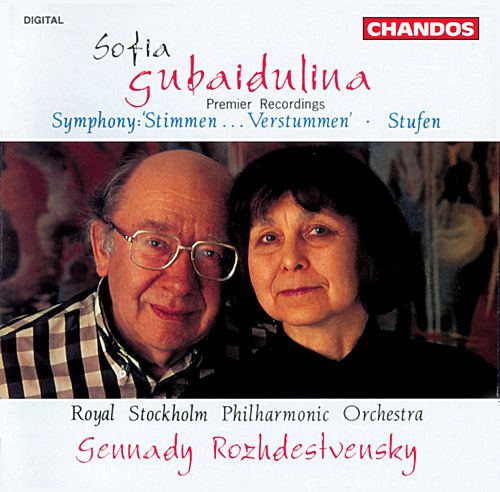
Music Composed by Sofia Gubaidulina
Played by the Royal Stockholm Philharmonic Orchestra
Conducted by Gennady Rozhdestvensky
"On this, his only all-Gubaidulina release, old friend Rozhdestvensky conducts the Stimmen… Verstummen
symphony dedicated to him and also acts as narrator in the other piece Stufen. The large-scale symphony
completed in 1986 uses a full orchestra and, somewhat unusually for this composer, features major parts
for all wind-instruments that are occasionally played using extended techniques. Less unusually there are
also extensive parts for various percussion instruments including xylophones. Still the music sounds not at
all crowded and is scored very transparently, which makes for a fascinating and very colourful atmosphere,
especially in the fairytale-like movement that recurs throughout which I suppose makes this a symphonic
work rather than episodic. Its title neatly describes the piece’s form: at first everything "tunes up" towards
the central eleven-minute climax after which everything "quiets down" towards the dream-like finale.
More or less the same applies to companion piece Stufen which dates from 1992 and I’d say actually is
episodic, as again implied by its title which translates as "stages". Here the atmosphere is slightly darker
and there’s more to do for the string sections of the fine Stockholm Philharmonic. The final stage weaves
together several strands of Rozhdestvensky speaking unspecified Russian texts.
To conclude, another indispensible disc for Gubaidulina collectors, because Stufen has not been released
elsewhere whereas the symphony is only otherwise available in the large Sch???nberg Ensemble
Edition box-set."
Amazon Reviewer
Source: Chandos Records CD (my rip!)
Formats: FLAC(RAR), DDD Stereo, mp3(320)
File Sizes: 197 MB / 126 MB (FLAC version includes cover & booklet)
The FLAC link has now expired. No more requests for this, please!
mp3 version – https://mega.co.nz/#!31hixTBA!ug9l8Yy-3FAEYIVQDv9BeuIOv3Jy78v2rJYzMlRWeJY
Enjoy! Don’t share! Buy the original! And if you downloaded this album, could you kindly click on "Like"? 🙂
Thanks for this!
Modern: Tonal
Bengt Tommy Andersson (*1964 in Bor???s, Sweden) is a Swedish conductor and composer. Andersson received his training as a
conductor at the Royal College of Music, Stockholm, where he worked with Eric Ericson, P???ter E???tv???s, Brian Priestman,
Sergiu Comissiona and Gennady Rozhdestvensky. Andersson conducted most of the major orchestras in Sweden in his
twenties and thirties – and many elsewhere – before focussing resolutely on composition after the success of his
breakthrough work, the percussion concerto Apollo, in 1995. Since 2003 he has been Professor of Orchestral
Conducting at the Music Academy in Gothenburg. Andersson is a member of the Swedish Society of Composers.
The cover image, Garden of Delights by Hieronumus Bosch, located at the Prado museum has inspired
Bengt Tommy Andersson when composing this piece. No so much recreating the painting in music but to
capture some of the stir and motion, contrasted with the passion and serenity, witch is to be found in this
magnificent triptych. The composer writes: "As I saw the painting in real life for the first time in 2002,
I was completely overwhelmed, and immediately realised that it was excellent inspiration for a piece of
music. Seven years later, I finally used the source of inspiration for this orchestral work. In December 2010,
the dance work Warriors (choreographed by Pontus Lidberg) was premiered at Norrlandsoperan i Ume???
and widely acclaimed.
Music Composed and Conducted by B. Tommy Andersson
Played by The Symphony Orchestra of Norrlands Opera
“The concert opened with B Tommy Andersson’s The Garden of Delights, a tone poem based on the famous
Hieronymus Bosch triptych, although the composer disclaimed any programmatic intention. But the opening
was clearly a depiction of Hell, while the gentler central section was – if not Paradise – at least the Garden of Eden,
with its chirruping songbirds sounding through the stillness recalling the depiction of The Garden of Love from
Messiaen’s Turangalila Symphony if with rather more chastity. The long-breathed violin melody, with its almost
Mantovani-like cascades of string tone, was particularly beautiful. The return of the ‘Hell’ music found the wood
blocks ticking away like some sort of demented metronome, in a passage which surely was intended to illustrate
one of the depictions in Bosch’s painting; but the conclusion, particularly after the long pastoral centrepiece,
seemed curiously brief. The capacity audience, hardly any one of whom will have heard the piece before, were
enthusiastic in their acclaim for the composer and the players, and the performance was simply stunning in both
its virtuosity and its repose. One looks forward to further encounters with Andersson’s music (he has been
appointed the orchestra’s composer in residence for this season) later in the year.”
Concert Review
Source: Sterling Records CD (My rip!)
Format: mp3(320), DDD Stereo
File Size: 129 MB (incl. covers & composer bio)
Download Link – https://mega.nz/#!Y7YzzYBD!b0h7Sj-lTbzZKQ1ku9GIehAIX5qxl_lc_PYh13TzU-o
/>
Enjoy! Don’t share! Buy the original! Click on "Reputation" button if you downloaded this album! 🙂
Romantic
German composer Woldemar Bargiel’s (1828-1897) father, Adolf Bargiel, had been a colleague of Friedrich Wieck, father of
Clara Schumann and for a time the teacher of Robert Schumann. Wieck’s wife left him for Bargiel, and Woldemar was their son,
Clara Schumann’s half-brother. He studied at the Leipzig Conservatory, before embarking on a career that brought teaching and
conducting appointments in Cologne, in Rotterdam, and finally in Berlin. He was closely associated with Schumann, Joachim,
Brahms and their circle, and his piano compositions have much in common with Schumann’s.
Everybody enjoing Beethoven will love Woldemar Bargiel’s Symphony in C. Very insisting first movement reminding of
Beethoven, symphony 5. This first theme is very easy to remember, in all its persistant first motive. The second movement
is slightly reminiscent of Gade, who influenced Bargiel too. Bargiel was active in the same institution as Gade.
The other pieces are artful, well crafted orchestral pieces.
Music Composed by Woldemar Bargiel
Played by the Orquesta Sinf???nica de San Luis Potosi
Conducted by Jos??? Miramoutes Zapata
"The Sinfonia in C is in four movements and was dedicated to Joseph Joachim. Its thunder and lightning finds uncanny
parallels with the world and detail of Beethoven’s Third and Fifth symphonies. The Mexican orchestra is not found wanting
in any respect, whether in the tempests of the outer movements, in the peaceful groves of the Andante con moto – Molto
tranquillo or in the Haydnesque tribute that is the Menuett. The finale again pays court to Beethoven but also sports something
of the galloping confidence of the last movement of Mendelssohn’s Third Symphony.
The Overture zu Medea, inspired by Euripides’s tragedy, presents a properly tense and even sour introduction. The movement
then proceeds to a suavely melodic second section. It is reminiscent of Mendelssohn’s concert overtures and like Ruy Blas
has a groaningly portentous element, which in this case closes the work. The Intermezzo Op.46 is a warmly glowing
processional without any portents of tragedy. The Overture zu einem Trauenspiel was inspired by Shakespeare’s "Romeo
and Juliet". The music muses but the smooth surface is ruffled by darker presentiments before (6:44) presenting a
tenderness apt to the subject of the young lovers. At 8:00 there is an onset of emotional turbulence. Again the idiom
remains related to that of mature Mendelssohn and Beethoven. It ends in peace without the dark emotional eddies that
stirred the music at the start.
The recording presents a strong profile throughout. While letting in the light, it is not what you would call transparent.
The latter quality is not paramount anyway with music of this caste, which presents a staunch and yeoman sturdy late-
romantic texture and image.
Unlike the Ponce and Castro discs, these recordings were made in studio conditions with no audience present.
Accordingly the listener is spared applause at the end of works."
Musicweb
Source: Sterling Records CD (My rip!)
Format: mp3(320), DDD Stereo
File Sizes: 157 MB (incl. covers & composer bio)
Download Link – https://mega.nz/#!12RCBZIJ!n7A4Xf6iJK5ZIfnI7dydXDF01KuQJalQvKvzKtWrbJA
Enjoy! Don’t share! Buy the original! Click on "Reputation" button if you downloaded this album! 🙂
Modern: Neo-Classical
This first of four recordings of Alfredo Casella’s orchestral music ion Naxos couples his first and last purely orchestral works.
Completed the day before his 23rd birthday, the Symphony No. 1, which here receives it world premi???re recording, exudes
a self-confidence few composers could match at such an age. Although it abounds in echoes of other music, at its best—above all in
the beautiful central slow movement—the Symphony has a truly distinctive identity: Casella’s fondness for dark, even crepuscular
sonorities can be heard in the sometimes stunningly imaginative orchestration. After that, the driving motoric rhythms and astringent
harmonies and timbres of the Concerto, Op. 69 erupt like the work of a different man entirely.
Music Composed by Alfredo Casella
Played by the Orchestra Sinfonica di Roma
With Desir???e Scuccuglia (piano) & Antonio Ceravolo (percussion)
Conducted by Francesco La Vecchia
"There is great tragedy here. The war years left a host of musical talents damaged by their very human inabilities to
deal with the nightmare that was Europe during the war. The stain of fascism darkened the reputation of greater artists
than Italian composer Alfredo Cassella, but this disc illustrates how tragic it remains that it almost completely obliterated
him. These are both exceptional pieces of music—the early, Romantic Symphony no. 1 in B-Minor from 1905–06 and the
superb 1943 “Concerto for Strings, Percussion, Timpani and Percussion” is a more than honorable descendant of Bart???k’s
“Music for Strings, Percussion and Celesta” and Bohuslav Martinů’s “Double Concerto for two string orchestra, piano and
timpani.” The critical cant on Cassella is that notwithstanding his political collaborations, he was a stylistic will-o’-the-wisp,
susceptible to prevailing influences whatever they be. Perhaps so, but there are moments of extraordinary beauty and
even majesty in this music that virtually beg for wholesale reassessment."
The Buffalo News
Source: Naxos CD (My rip!)
Format: mp3(320), DDD Stereo
File Size: 155 MB (incl. covers & booklet)
Download Link – https://mega.nz/#!p75R2DLJ!NwmdMeGooSWfTnPEbUAGAXfHtAgIDVCg0tIfmkTbJLk
Enjoy! Don’t share! Buy the original! Click on "Reputation" button if you downloaded this album! 🙂
Modern: Tonal
Composer, musicologist and Byzantine expert, Egon Wellesz (1885-1974) led a busy and productive life dedicated to the
service of music. All aspects of Wellesz’s impressive career were comprehensively covered in an informative and fascinating
exhibition held from March 31stth to May 5th 2000 in Vienna at the Austrian Academy of Sciences and organised by the dynamic
Egon Wellesz Foundation. This exhibition (a reduced version of which continues from the 9th May until the 4th May 2001 at 37,
Reisnerstrasse in Vienna) includes press cuttings, artefacts and medals from all eras of Wellesz’s career. It is but a part of the
continuing rise in Wellesz’s international profile, one of the highpoints of which was reached on April 29th when the composer’s
Third Symphony received its world premi???re in the prestigious surroundings of Vienna’s Musikverein nearly fifty years after
Wellesz completed it.
The Third (written in Oxford between May 1950 and September 1951) has long been the Cinderella of Wellesz’s magnificent
nine symphonies. Having completing the score, the composer searched for a publisher in vain and first performance plans involving
the BBC and Sir Adrian Boult fell through. Wellesz began his Fourth Symphony (1951-1953) almost immediately and understandably
became more concerned with his latest project. From the Fifth (1956) onwards, Wellesz’s symphonic style became more Expressionist
and his former teacher Schoenberg replaced Bruckner as the predominating influence. Wellesz lost the impetus to get his Third
premi???red: as late as the mid-1960s when the Sixth Symphony was nearing its first performance, he wrote that, as far as the
Third was concerned, "we have to wait". The Third Symphony is at once the most powerfully dramatic and operatic of Wellesz’s
cycle. The composer’s distinguished contributions to both ballet and opera are evident in the score.
In contrast, the Fifth Symphony is a much darker and more forbidding composition strongly influenced by Wellesz’s
teacher Schoenberg.
Music Composed by Egon Wellesz
Played by the Vienna Radio Symphony Orchestra
Conducted by Gottfried Rabl
"Viennese Wellesz was born into an affluent Jewish family and had every expectation of a brilliant musical career in his
home city. However events in Germany were to end all that. There was no place for him in Hitler’s Greater Reich.
He fled to England. The first five symphonies proclaim their roots in the great Germanic symphonic tradition with
frank linkages to Schubert, Bruckner and Mahler increasingly viewed through Schoenberg’s 12-tone ‘glass’
The Symphony No. 3 was started one year after completion of the Second and was not premiered until 2002. It is a work
of his British years. The music has little in the way of surface attraction – no easy victories. There is a Brahmsian sobriety
about this and the first movement is like a Bach organ work transcribed by Schoenberg. The second is more ingratiating
but rises to a Brucknerian gravity of expression. The scherzo third movement skips along almost nonchalantly with
Brucknerian references peeping through the barlines … and the sun is shining. A contented gift of a melody plays the
feminine counter to a daring masculine figure recalling the Bruckner symphonies 3 and 4. The finale has Protestant sobriety
and downbeat as if wanting to put behind it the ‘indecency’ of the two central movements. I must not overdo the
Schoenberg voice but certainly the music does betray a free approach to tonality. The symphony ends with a typically
terse Brucknerian gesture.
Four years later comes the Fifth Symphony with a similar palette and style book as the Third. Again the four movements
are desperately serious with strong tribute presented to the Schoenberg camp. They only lack the contrast of the central
movements of the Third. Counterpoint and fugue thread their way through this work of North German sobriety a mood
emphasised by the work’s centre of gravity in the adagio molto III. It smiles of course but relentlessly. Solo voices,
woodwind and violin, float free but the language is always occluded and soaked in the 12-tone argot. Intriguingly the
finale with its pummelling bass-heavy sound is topped off by shrieking trumpets in contrast to all that has gone before.
It ends with an emphatic angry growl. Rabl gives a masterfully intense performance – deeply impressive. Trudging,
violent, turbulent, and unforgiving, there is even majesty of sorts – an awe-struck forbidding sort.
Two deeply serious Germanic symphonies touched to varying degrees by the influence of Schoenberg."
Musicweb
Source: CPO Classics CD (My rip!)
Format: mp3(320), DDD Stereo
File Size: 150 MB (incl. front cover)
Download Link – https://mega.nz/#!lmIQERLK!gd7SGwwiLtMNWEy0t1LxeLuHQwih-PCVQOvmQMIHt6c
/>
Enjoy! Don’t share! Buy the original! Click on "Reputation" button if you downloaded this album! 🙂
Modern: Tonal
Egon Wellesz’s name comes up together with Sch???nberg, Berg, and Webern when the Viennese school of the early twentieth
century is the topic, even though he very early left behind the environment created by such twelve-toners in quest of his own harmonic
paths. Born in Vienna, Wellesz was one of Sch???nberg’s first pupils and a musicology student under Guido Adler, with his training in
both disciplines turning out to be of use to him later in life. Until the outbreak of World War II he was one of the most-performed
composers in German-speaking Europe, and his five operas were successfully premiered at the leading German houses. At the time
he was also a professor of musicology specializing in the decipherment of Byzantine notation. Then things fell apart. He was forced
into emigration in England in 1938 but was able to continue his university career in Oxford. Wellesz the composer remained silent
until the end of the war, when he first regained his full creative powers and then went on to compose almost half of his oeuvre after
his sixtieth birthday. His nine symphonies are without a doubt the main works of this late period. The emigrant very deliberately
drew on Austrian symphonic music, with his symphonies involving, among other things, an effort to come to terms with his loss
of his home.
Music Composed by Egon Wellesz
Played by the Vienna Radio Symphony Orchestra
Conducted by Gottfried Rabl
"Born in Vienna, Austria, Gottfried Rabl studied piano and French Horn. He holds graduate degrees in French horn,
conducting and vocal coaching from the University of Music in Vienna. He was awarded a conducting fellowship in
Helsinki and led his own highly successful ensemble for contemporary music “Theatre of Silence” for several years,
in which he appeared as conductor, pianist and composer. Later, he started a close collaboration with Leonard Bernstein
in Vienna, Milan and the USA, during which Rabl served as musical assistant and editor of Bernstein’s last opera
“A Quiet Place”. He subsequently pursued for several years post-graduate studies at Indiana University in the
United States, where he also worked as conductor of the local symphony orchestra and modern music ansemble.
Recognised by the press for his strength and intensity in conducting nineteenth and twentieth century repertoire,
Gottfried Rabl conducts frequently the Vienna Radio Symphony Orchestra, the internationally recognised ensemble
‘die reihe’, and has worked with the Vienna Concert Orchestra, the Radio Choir and the Vienna Concert Choir.
His special cooperations include his frequent involvement in a very successful program presenting classical music
to young listeners as well as a series of performances at the ‘Dance Quarter’ in Vienna. called ‘Pieces of Movement
for Orchestra’, in which the Radio Orchestra under Mr. Rabl worked together with five internationally recognised
choreographers, performing musically as well as physically throughout the production.
Internationally, Gottfried Rabl has worked with the NDR Radio Philharmonic Hannover, the Prague Symphony
Orchestra, the Queensland Symphony Orchestra, Australia, and the George Enescu Philharmonic, Bucharest, just
to name a few. He has recorded for BMG-Ariola and the German labels Orfeo and cpo as well as SONY Classical.
His special interest is directed to the lesser known repertoire of neglected composers trying to present them in a
new, sophisticated context that makes their inherent quality recognisable at the first hearing.
His numerous recordings with the Vienna Radio Symphony Orchestra encompass a wide range of diverse musical
styles, with the most recent recordings having received enormous critical acclaim Mr. Rabl has recorded the nine
symphonies of Egon Wellesz for the innovative German label cpo, all of which are World premiere recordings.
The first two CDs received raving reviews in Europe as well in the United States and have been nominated for
the Grammy Award and at the Midem 2004 for the best recording of a 20th century composition.
Three CDs with Italian tenor Enrico Caruso, whose voice was first digitally separated from the old orchestra and
then delicately accompanied anew with the Vienna Radio Symphony Orchestra under Mr. Rabl sold more than
100 000 copies each. The first has been awarded the coveted “Echo”-prize in Germany.
For the 40th anniversary of the Vienna Radio Symphony Orchestra Mr. Rabl recorded 102 miniatures by Austrian
composers especially written for this occasion and dedicated to the orchestra. Just recently Mr. Rabl has recorded
a CD with works by Chinese composers Shuya Xu and Deqing Wen for the label Naxos and the soundtrack for
the German/Austrian film production “Measuring the World” which has been recorded and released in 2013."
Source: CPO Classics CD (My rip!)
Format: mp3(320), DDD Stereo
File Sizes: 170 MB (incl. front cover & booklet)
Download Link – https://mega.nz/#!ArJCkTBT!_d-WQ0YxD55NNKnZ9BbwthT-fw3SPs6KRYq3Q_GShws
/>
Enjoy! Don’t share! Buy the original! Click on "Reputation" button if you downloaded this album! 🙂
Great upload!
Modern: Tonal
Steven Stucky (1949-2016) was one of America’s most highly regarded and frequently performed living
composers. Winner of the 2005 Pulitzer Prize for his Second Concerto for Orchestra, he was a trustee of the
American Academy in Rome, a director of New Music USA, a board member of the Koussevitzky Music Foundation,
and a member of the American Academy of Arts and Letters and the American Academy of Arts and Sciences.
He was also active as a conductor, writer, lecturer, and teacher.
Music Composed by Steven Stucky
Played by the Boston Modern Orchestra Project
With Sanford Sylvan (baritone)
Conducted by Gil Rose
"The gifted American composer Steven Stucky just passed away last year and fortunately he left behind a rich myriad
of music in nearly every genre for us to enjoy and to appreciate his talents for orchestration, harmony and – that most
elusive of “modern music” qualities – melodic line.
The BMOP and its dedicated and talented director Gil Rose have done Stucky’s music many times and has its own rich
legacy of recordings of modern music to marvel at. This present recording is well worth having both for it being another
well-done collection of contemporary American concert music but for being an important addition to the Steven Stucky
recording compendium.
These three works are all quite interesting and attractive. Rhapsodies was written in 2008 for Lorin Maazel and the
New York Philharmonic to take on their pending European tour. This relatively brief (nine minute) work is, indeed,
‘rhapsodic’ and the work is filled with the most exquisite harmonies and voicings that seem to channel Debussy in
places. This is a very rewarding work.
My favorite work in this collection is the middle selection; the absolutely transcendental song cycle, American Muse.
Commissioned by the Los Angeles Philharmonic in 1999 – an orchestra with which Stucky was closely affiliated for
many years – this a collection of four songs for baritone and orchestra on themes of Americana. The four poems which
serve as the text are “American Lights Seen from Off Abroad” by John Berryman, “Buffalo Bills” by e.e. cummings,
“Delaware Water Gap” by A.R. Ammons and the often set to music “I Hear America Singing” by Walt Whitman.
The quality and impact of Stucky’s writing are bolstered by the performance and vocal timbre of the great
Sanford Sylvan, best known for the number of John Adams scores he has premiered. American Muse is a simply
wonderful piece of music and Stucky’s setting of the Whitman is the finest I have heard.
This collection close with Stucky’s appreciable and powerful Concerto for Orchestra, premiered in 1988 with Riccardo Muti
and the Philadelphia Orchestra as part of a series of commissions in celebration of the bicentennial of the Unites States
constitution. With the earliest work in this set, I agree with BMOP booklet annotator Donald Crockett that the three-
movement Concerto does contain some stylistic similarities to the work of Witold Lutaslawski, a composer who Stucky
admired a great deal. This very exciting and compelling piece stands its ground as one of the truly impressive works
in that genre and titled as Concerto for Orchestra; including Lutaslawski’s own. In fact, if we examine works of this
genre just by American composers I place Steve’s on a short list of the best along with those by Joan Tower,
Christopher Rouse and Jennifer Higdon.
I have been a fan of Steven Stucky’s music for many years now and was saddened when he died rather suddenly.
I recommend this wonderful and sonically pure recording to all those who already admire Stucky’s music but also
enthusiastically to those who have never heard it before. It is truly rewarding."
The Audiophile Audition
Source: BMOP/sound CD (My rip!)
Format: mp3(320), DDD Stereo
File Size: 143 MB (incl. cover & booklet)
Download Link – https://mega.nz/#!Qr5SzJTD!ivDVtD-_EmEgYj404z-euoXZB7sMNl-UhNVoirE-o7s
/>
Enjoy! Don’t share! Buy the original! Click on "Reputation" button if you downloaded this album! 🙂
Modern: Tonal
Florencio Asenjo was born in Buenos Aires, Argentina. He is best known for his approach to composing called "maximalism,"
the objective of which was to achieve a high density of content in constant change: he decided to base his composing on the
creation of sequences of themes that, taken in succession, were each a development of the preceding music. Again, this was not
to be a formal development, or a variation on previous themes, but the creation of entirely new themes connected aesthetically
to the preceding ones, a development of substance rather than of form, just as the various characters in a play do not repeat
the same sentences over and over again except for special purposes; rather, each rejoins the preceding dialogue to take it
further, while retaining the continuity of meaning and atmosphere. But please note: the result is not an avant-garde exercise.
This is very colorful music, full of rich atmosphere and drama, upholding the traditions started by his fellow countrymen,
such as Alberto Ginastera.
You can find other works by Florencio Asenjo >here< (Thread 121898), >here< (Thread 121898), >here< (Thread 121898) and >here< (Thread 121898).
Music Composed by Florencio Asenjo
Played by the Capella Istropolitana
Conducted by Kir Trevor
"Kirk Trevor is a British conductor. He started conducting when he was eight, and gave his first concert at 12. As a student
at the Guildhall School of Music, he graduated cum laude in cello performance and conducting, and continued to study cello
with Paul Tortelier and conducting with Sir Adrian Boult. A Fulbright exchange grant enabled him to come to the United States
in 1975 to study cello at the North Carolina School of the Arts at Winston-Salem. In 1982, he was named by Eduardo Mata
as resident conductor of the Dallas Symphony Orchestra. Trevor also served as the music director of the Knoxville Symphony
Orchestra. He won the Leonard Bernstein Conducting Competition in 1990, and pursued his second career as a music educator,
founding the International Workshop for Conductors. From 1995 to 2000, he served as music director of the Bohuslav Martinu
Philharmonic Orchestra in the Czech Republic, and from 2002 to 2005, he was the principal guest conductor of the Slovak
Radio Symphony Orchestra. In 2000, Trevor became the music director of the Missouri Symphony Orchestra, and established
the Missouri Symphony Conservatory in 2007 to educate young musicians in a variety of disciplines. Trevor has released
over 100 CDs, recording for MMC Recordings, Navona Records, MSR Classics, and Naxos, among others."
Source: Albany Records CD (My rip!)
Format: mp3(320), DDD Stereo
File Size: 176 MB (incl. covers & booklet)
Download Link – https://mega.nz/#!R3xyRSgY!FbPOgI_wBWptslVkRVe44J0ilEpgXvCvnqbL4w6-pbo
/>
Enjoy! Don’t share! Buy the original! Click on "Reputation" button if you downloaded this album! 🙂
Modern: Tonal
Alexandre Tansman’s Concerto for Orchestra inevitably invites comparison to Bart???k’s masterpiece. A lot of composers seemed to enter the lists with
C’s for O of their own after Bart???k’s tremendous success, but the only ones I’ve heard that come up to that level are Lutosławski’s and Tippett’s, and even
so, they’re less formally assured. The Tansman doesn’t strive like the Bart???k or aim so high, but its uncluttered lines do attract the listener. The penultimate
Lento movement in particular sings beautifully, with some of the most expressive rests I’ve ever heard. It reminds me a bit of the singers who hung their
harps on the willows "by the rivers of Babylon." It interests me how Tansman follows and deviates from Bart???k. The first movement seems to follow the
first movement of the earlier work, at least as far as general movement of expression goes. On the other hand, you wonder why he calls the work a
concerto at all.
The ???tudes for Orchestra call for more obvious virtuosity, particularly as far as rhythm is concerned. Tansman should have called this
work the "concerto," since he does make more of the "competition" among sections for musical attention. The Capriccio comes across as
lighter weight, despite a highly evocative "Notturno," where the stars seem to glitter in a black sky. The liner notes make much of Tansman’s
closeness to Stravinsky and try to argue for a close musical connection as well, but they mislead. Stravinsky was always sui generis. His music
really is unique to him. His closest imitators – certain pieces by Lambert, Fine, Talma, or Dahl, for example – show who they really are after
a couple of bars.
Music Composed by Alexandre Tansman
Played by the Moscow Symphony Orchestra
Conducted by Antonio de Almeida
"Antonio de Almeida was born to a Portuguese mother and American father, who emigrated to Argentina when he was young. There he studied
theory and composition with the composer Alberto Ginastera, and cello with Washington Castro. Subsequently he was a pupil of Paul Hindemith at
Yale University. He worked for two seasons at Tanglewood with Serge Koussevitzky and then with George Szell and Leonard Bernstein, going on
to play horn, bassoon, oboe, clarinet and cello in several student orchestras. In 1945 he founded the MIT (Massachusetts Institute of Technology)
Symphony Orchestra in Boston, and in 1947 the Chamber Orchestra of New Haven. Almeida then worked in Mexico before becoming head of the
opera department at the University of Los Angeles in 1953. His conducting career soon developed in Europe: between 1957 and 1960 he directed
the Symphony Orchestra of Radio Lisbon in Portugal; during the following decade he led the Stuttgart Philharmonic Orchestra for the 1963–1964
season; and he went on to work at the Paris Opera between 1965 and 1967. Returning to the USA as principal guest conductor of the Houston
Symphony Orchestra between 1969 and 1971, Almeida was subsequently also musical director of the Friends of French Opera, New York.
From 1976 to 1978 he was music director of the Nice Philharmonic Orchestra in France.
Antonio de Almeida’s career was now international in scope, with many guest engagements with front-rank ensembles such as the Chicago,
Philadelphia and San Francisco Symphony Orchestras in the USA, and the Royal Philharmonic and Berlin Philharmonic Orchestras in Europe,
amongst many others. In 1992 he took up his last permanent post, as music director of the Moscow Symphony Orchestra, a position that he
held until his death in 1997. His repertoire was extremely catholic, although with a distinct bias towards French music. He prepared a thematic
catalogue of the music of Offenbach and conducted the first complete reconstruction of the original score of Les Contes d’Hoffmann. He also
edited a complete edition of the symphonies of Boccherini. For his services to French music he was made a member of the L???gion d’honneur.
On record Almeida championed the unknown, making the first recording of Bizet’s opera Le Docteur Miracle. Towards the end of his life he
conducted the Moscow Symphony Orchestra in many significant premi???re recordings of music by Sauguet, Castillo, Tournemire and Malipiero,
for the Marco Polo label. Other highlights of his recorded repertoire include a set of rarely performed symphonies by Haydn for the Haydn
Foundation; fine accounts of the operas La Juive (Hal???vy), Mignon (Thomas), Le Calife de Bagdad (Boieldieu) and L’infidelt??? delusa (Haydn);
music by Lalo, Schmitt, Chausson, Dukas and Duparc; and the complete operatic ballet music of Donizetti and Rossini. His performances
were always assured, and in French music in particular possessed style and sensitivity."
Source: Marco Polo CD (My rip)
Format: mp3(320), DDD Stereo
File Size: 168 MB (incl. covers & booklet)
Download Link – https://mega.nz/#!kuwlVChZ!GfTlqCW3xyyviYk7ZoGJPW84NdVeGND-QN1xdtS0UuM
/>
Enjoy! Don’t share! Buy the original! Click on "Reputation" button if you downloaded this album! 🙂
Romantic
Zygmunt Noskowski (1846–1909) was a Polish composer, conductor and teacher. Noskowski was born in Warsaw and
was originally trained at the Warsaw Conservatory studying violin and composition with Stanisław Moniuszko, graduated with
distinction in 1867. A scholarship enabled him to travel to Berlin where between 1872 and 1875, he studied with Friedrich Kiel,
one of Europe’s leading teachers of composition. After holding several positions – kapellmeister and conductor of the Bodan
Choral Society in Konstanz, Noskowski returned to Warsaw in 1880 where he remained for the rest of his life, professor of
composition at the Warsaw Conservatory and conductor of Warsaw Society of Friends and the Warsaw Philharmonic (1905-1908).
He worked not only as a composer, but also became a famous teacher, a prominent conductor and a journalist. He was one
of the leading figures in Polish music during the late 19th century and the first decade of the 20th. He taught virtually all of
the important Polish composers of the next generation, including Karol Szymanowski[1] and Grzegorz Fitelberg. He served as
head of the Warsaw Music Society from 1880 to 1902 and was considered Poland’s leading composer during the last decade
of his life. He died in Warsaw.
The Symphony No.3 premiered on the 15. January 1904 and is a musical image of the seasons of the year.
It is so permeated with a Polish flavour that one cannot help comparing it with Wladyslaw Reymont’s novel
Chlopi which was written at the same time based on the same concept. By extrolling the Polish countryside and
customs Zygmunt Noskowski could express his patriotic sentiments in a form that did not provoke the
Tsarist cencors.
Music Composed by Zygmunt Noskowski
Played by the Polish National Radio Symphony Orchestra & Warsaw Radio Symphony
Conducted by Jos??? Maria Flor???ncio & Lukasz Borowicz
"This pictorial Symphony progresses via a melancholically predestined Mahlerian route from spring to winter. We start
with Spring in what is a sweet-tempered pastoral yet with a taut symphonic tension about it. Here is a skilled mature
composer well able to mobilise deep-pile romantic orchestration. Listen at 8:51 to the sunny chipper wind writing
This dates from the same year as the Paderewski Symphony which is a quite different and more darkly clouded work,
though ultimately self-indulgent (review ~ review). Summer is memorable for the sweet work of solo harp and cor
anglais and shares a mood with Suk’s A Summer Tale of 1907 (review ~ review) if not his much later Ripening of
1917 (review ~ review). There are some very inventive soloistic moments including a long and piercing violin solo (6:23)
rising to a swaying summery royalty worthy of the warmest moments in Glazunov’s The Seasons. Autumn conveys a
sort of harvest-home – rather like the folk suites of Ludolf Nielsen or Goldmark’s Rustic Wedding. I mentioned Glazunov
earlier but if this movement has any parallels with that composer it is with the Seventh Symphony – The Pastoral.
Winter tightens the tension again with some lovely writing: the glorious and masterful silver cackle of the violin at 6:10
and at 8:30 a conventional optimistic striding march. This romps along, achieving a joyous ending. Overall this indulgent
work is more pictorial cavalcade than tense symphony. Its optimism is reflected in the title: Noskowski was not going
to end with the tragic wastes of Winter.
From the Life of the Nation is in 18 separately-tracked segments. Behind this title stands a set of orchestral variations
on Chopin’s Prelude in A Minor Op. 28 No. 7. The Prelude itself is very warmly stated. The lustrous variations are nicely
pointed and variegated, limned in by ripe, chattery gumbootedly playful woodwind (6-7-8), Brahmsian sidling (9) and
Tchaikovskian gallantry (10). The music is given the grand ballroom treatment (13), sentimentality (14) and a romantic
winter shiver (15-16). An episode sports some very romantic soft focus work for a sweet-toned solo violin (18). Other
variations encompass the stately and the serene with some delicate balletic magic (20) and some rompingly confident
jollity (21). This work would contrast well with the Enigma Variations as well as the Tchaikovsky suites, especially
Numbers 3 and 4.
The Prelude to Act II of the 1898 opera Livia Quintilla is a quality piece – dense with lyrical Tchaikovskian succulence
and poignant melancholy. Noskowski’s way with wisps of melody is most impressive and in this case there is no
crashing drama or thunder and lightning. I wonder what the chances are of hearing this opera not to mention his
Wyrok (The Judgment) and Zemsta za mur graniczny (Revenge for the Boundary Wall). There are also said to be
several operettas, vaudevilles and ‘folk pictures’. The placidly rounded, kindly and dignified Elegiac Polonaise is
similarly pleasing."
Source: Sterling Records CD (My rip)
Format: mp3(320), DDD Stereo
File Size: 227 MB (incl. cover & booklet)
Download Link – https://mega.nz/#!MigHmbKJ!enjIj4G9K3BLa236ZwptGp_kKnWqYkn2ZrSxmxK5Lrw
Enjoy! Don’t share! Buy the original! Click on "Reputation" button if you downloaded this album! 🙂
British Light Music
British composer David Lyon was born in Walsall in 1938. Educated: Queen Mary’s Grammar School,
Walsall; Royal Academy of Music; Bristol University. Composer of orchestral, vocal, chamber
and theatre music, written in accessible idiom with emphasis on melody, rhythm and colour.
Orchestral works range from light music miniatures to substantial concert works (Variations
for Orchestra, Piano Concerto etc.) Many of these have received regular broadcasts.
Music Composed by David Lyon
Played by the Royal Ballet Sinfonia
With Michael Thompson (French horn)
Conducted by David Lloyd-Jones
"I admit to being bowled over by Lyon’s compositions, which are strongly melodic and superbly crafted. All these works
are little gems and deserve to be much better known.’ Fairytale Suite: ‘bewitching and glittering..’ Farnham Suite:‘enchanting,
lyrical..’ Ballet for Orchestra: ‘energetic and attention-gripping’. David Lloyd-Jones ‘conducts…with great commitment and
enthusiasm.’ (5 stars for performance, gold star for ‘outstanding quality’."
BBC Music Magazine
"..written with a brilliant ear for the orchestra and a fund of memorable invention’. The Horn Concerto ‘is clearly from the
mainstream (of) delightful horn concertos by British composers written since the war.. gorgeous playing by the soloist.
The slow movement’s lovely wide-spanning horn cantilena provides Michael Thompson every opportunity to show off his
lovely burnished tone’ In Fantasia ‘Lyon establishes his own world..with entertaining parodies of various composers from
Rossini to Stravinsky. The other pieces are all enjoyable, Overture to a Comic Opera particularly so’. Fairytale Suite has a
‘beautifully decorated’ Waltz written with an ‘expert ear for colour’, and the Finale ‘is a gorgeous romantic confection’.
Ballet for Orchestra .. ‘a brilliant and engaging work for any concert programme, and one to return to on CD."
British Music Society News
Source: Marco Polo CD (My rip)
Format: mp3(320), DDD Stereo
File Size: 143 MB (incl. covers & booklet)
Download Link – https://mega.nz/#!RvIwTBaB!cujkd3eIINDTaut0IUel0LcpxE1fCBhxsvk5Z2ak6-g
Enjoy! Don’t share! Buy the original! Click on "Reputation" button if you downloaded this album! 🙂
Romantic
Jakob Adolf H???gg, b. ???stergarn, Gotland, 26 (alt. 27) June 1850, was one of the foremost exponents of Swedish
Leipzig romanticism and bequeathed a copious output of mainly piano music. He studied at the Royal Conservatory of Music,
Stockholm, between 1865 and 1870, and under Niels W. Gade in Copenhagen (1870−71). For a long time H???gg was cut
off from professional music by mental illness, but at the age of 45 he achieved a comeback as musician and composer.
He died in Hudiksvall on 1 March 1928.
The first of the pieces reminds me of the Swedish folksong Little "Spider climbs the wall". It is all great fun, also the
American Festival Ouverture based on the American national anthem. Just hear the wonderful songlike second theme in
track 2. well, worth the whole disc. Even Gade comes to mind. Jakob Adolf H???gg is a tragic case. He started off as
one of the most promising Swedish composer talents of all times. But it came to a standstill. He seemed unable to take
in more modern style in his compositions. The Nordic Symphony is a significant work in this respect. It just stays
being a well written Schumann symphony. The composer did suffer from mental disorder and ended his life in an asylum.
Not an unusual destiny also for so many contemporaries who never know how to obtain recognition in their lifetime.
Music Composed by Jakob Adolf H???gg
Played by the G???vleborg Symphony Orchestra
Conducted by Mats Liljefors & G???ran W. Nilson
"I didn’t think I’d heard any music by Jakob H???gg before this, but a quick search found that I had: two miniatures
for cello and piano on a Hyperion recording that I reviewed last year. I even picked out one of his works for special
mention, describing it as “rapturous”. Had I done this search before listening to this reissue, I may not have been
quite so surprised at the quality of the music.
According to the notes, H???gg was considered a potential Swedish equivalent to Grieg; a prodigy accepted into the
Stockholm Conservatory at the age of fourteen. He won the Jenny Lind Scholarship in 1870, and used it to travel to
Copenhagen, where he befriended Hans Christian Andersen and studied with Niels Gade, who regarded H???gg as his
favourite pupil. He continued his studies in Germany, but by the middle of the decade, he was displaying signs of
mental illness. In 1880, he was admitted to an institution for the mentally ill – his care was paid for by the royal
family – and not discharged until 1895. By this time, his youthful promise was long gone, and he spent his
remaining years in isolation.
Surprisingly, my favourite work on the disc, the American Festival Music, is from the time after he was released.
Certainly, it is rather old-fashioned for its time, but for all that, it is splendidly stirring. It is a set of variations
on the American song of liberty, Hail Columbia, which H???gg may have become aware of through his brother
who lived in the USA for an extended period.
The two Concert Overtures were written at the height of his promise, one in Stockholm, and the other in
Copenhagen. They too are fine works, with energy and melody bursting out of them, with a Mendelssohnian
feel. The weakest work for me is the Symphony, begun as a sonata for four hands while studying with Gade,
and completed in his isolation. It is described in the notes as Nordic in mood, but perhaps you need to be
Nordic to pick that up.
Sound quality is nothing to write home about, and in fact, the symphony, recorded 15 years before the others,
is cleaner and better defined, though still not great. That the music immediately grabbed my attention suggests
that the performances are very good. The booklet notes are thorough and readable, both in biographical and
musicological terms."
David Barker, Musicweb
Source: Sterling Records CD (My rip)
Format: mp3(320), DDD Stereo
File Size: 109 MB (incl. covers & booklet)
Download Link – https://mega.nz/#!AmQhAAhJ!PiB9bT7CnPwKgUX-pKZHbypNsRh82X1T4BVEgDUy7ZU
/>
Enjoy! Don’t share! Buy the original! Click on "Reputation" button if you downloaded this album! 🙂
Modern: Neo-Classical
The stage had fascinated Alexandre Tansman ever since his youth. One example is the music for Aristophanes??? Lysistrata,
which was performed at the Polish Theater in Ł???dź in 1916. Alexandre Arnoux wrote the librettos for the ballets Sextuor and
Bric ??? brac. The atmosphere of his novella Sextuor recalls E. T. A. Hoffmann???s romantic narratives. It is the dramatic
love story of the passion shared by a violin and a violoncello for a flute. The actors are various musical instruments, and Tansman
believed that here he had found ideal material for a ballet. And so it was: the work composed in 1923 was performed with great
international success and made the young composer famous. Although he suffered a great loss when his mother died in 1935, Tansman
found the strength to write a larger theatrical work. The result was the ballet Bric ??? brac. The director of the Grand Op???ra
in Paris wanted this ballet set between stalls of wood and corrugated iron at a flea market near the Porte de Clignancourt for a
premiere during the 1939 / 40 season. However, the outbreak of World War II thwarted these plans. After long negotiations
the work finally premiered on 30 November 1958.
Music Composed by Alexandre Tansman
Played by the Polish National Radio Symphony Orchestra
Conducted by Lukasz Borowicz & Wojciech Michniewski
Source: CPO Classics (My rip!)
Format: mp3(320), DDD Stereo
File Size: 270 MB (incl. covers & booklet)
Download Link – https://mega.nz/#!JnhgXbBJ!P9nh5m6Js0JRVk91lbFNwuwbk50gMQGtH8-zaY1G73o
/>
Enjoy! Don’t share! Buy the original! Click on "Reputation" button if you downloaded this album! 🙂
I would like to know how to search for all your Hugo’s CDs. How should I search? To go page by page could be heroic. Or maybe there is no way? Thank you anyway.
would-be-classical (tone poems, symphonies) – Thread 205188
the concerto collection – Thread 205454
Cheers!
Late Romantic
Emerging from the fertile background of Bohemian nationalism, Vitĕzslav Novak’s music achieved cult status
in his homeland for its richness of melody and full-blown romantic orchestral colour. The lush timbres and monumental
solemnity of In the Tatra Mountains were inspired by the composer’s journeys in this magnificent region.
Eternal Longing is based on a poem by Hans Christian Andersen, while the dramatic Lady Godiva Overture,
complete with tolling bells at the finale, was written by Novak in two days and is considered one of his most powerful works.
Music Composed by Vitĕzslav Nov???k
Buffalo Philharmoinic Orchestra
Conducted by JoAnn Falletta
"Turn the clock back fifty years and not a single disc of music by V???tězslav Nov???k was on worldwide release,
and even now he is little known outside of his homeland. It was the release of his Symphonic Poem, Pan, on Marco Polo
label some twenty-five years ago that awakened my lasting interest in the works of this former pupil of Anton???n Dvoř???k,
his style reminiscent of the era of his mentor. On his home-ground, he was very highly regarded during his lifetime,
even eclipsing fellow Czech composers that included Jan???ček, his readily likeable melodic content a perfect antidote
to all that was happening to music in the early part of the century. His ability to speak fluently in English, Russian,
German, French and Spanish gave him a wide access to the literary world, the central work on the disc being a picture
of Lady Godiva that was made famous by the writing of Alfred Lord Tennyson. The extended Overture to the play
staged in Prague in 1907, is for a large symphony orchestra and relates the story of the lady who—supposedly—rode
naked through the English city of Coventry in protest to the taxes levied on the populous by her husband. The disc
opens with the equally lengthy symphonic poem, V Tatrach (In the Tatra Mountains), a graphic description of Nov???k’s
journey through the impressive mountain range between Czechoslovakia and Poland (beautifully captured on the disc’s
cover). It has an epic quality that rivals Richard Strauss’s Alpine journey though less demonstratively expressed.
Equally evocative is the title O vecne touze (Eternal Longing) the score’s erotic content based on stories by
Hans Christian Andersen, though we cannot forget in the music the composer’s unrequited love at the time.
Comparison with other recordings—few though there are—would place these performances from JoAnn Falletta
and her Buffalo Philharmonic in first position, and they enjoy exemplary sound quality. A ‘must have’ release."
David’s Review Corner
Source: Naxos CD (My rip!)
Format: mp3(320), DDD Stereo
File Size: 129 MB (incl. covers & booklet)
Download Link – https://mega.nz/#!kzY3VICZ!eHGjhWYBgGYjHfLBWNHKTm-oc368e-dKvSh6Dqi0BMw
/>
Enjoy! Don’t share! Buy the original! Click on "Reputation" button if you downloaded this album! 🙂
Modern: Neo-Romantic
Over the past few years the highly charged, exuberant music of Florencio Asenjo (1927-2013) has been slowly appearing on CD,
and this is his debut on Albany. Asenjo employs an approach to music called maximalism, a method of transition from one
theme to another to achieve a highly dense content which is constantly changing. Perhaps the technique sounds experimental, but the
music certainly is not avant-garde. The Buenos-Aires born composer is beholden to his country’s colorful past, and anyone who enjoys
the early works (such as Estancia or Panambi) of Alberto Ginastera will certainly be caught up in the excitement of Asenjo’s music.
All three works on this disc were composed in 2004, and represent colorful portraits of life (Tearings and Glimpses) as well as
various psychological states of mind (Passion and Apotheosis). As Asenjo himself has written, "I like when large-scale
forms are built on many ideas. There should be a lot of independent ideas. I think that now the general need is for more substance
in music."
Music Composed by Florencio Asenjo
Played by the Slovak Philharmonic Orchestra
Conducted by Kirk Trevor
Source: Albany Records CD (My rip)
Format: mp3(320), DDD Stereo
File Size: 155 MB (incl. cover & booklet)
Download Link – https://mega.nz/#!x3BxTB4a!DNJtmO3JAkGmc_S-Vu4LzxscKxAYrdrUIJiJNoHYQ30
/>
Enjoy! Don’t share! Buy the original! Click on "Reputation" button if you downloaded this album! 🙂
Late Romantic
Tor Aulin (1866-1914) should have written more for orchestra. He is intense and personal at the same time.
The M???ster Olof Music is here depicted as a drama, apart from the lovely second movement with its beautiful
oboe idea. The music is very variable, as the drama. The storm is an exciting adventure, and the last movement in the
suite a grotesque overblown march! The Ture Rangstr???m (1884-1947) piece, Dithyramb, is everything you
might expect from a stinging Strindberg drama. Music depicting white heat and suspense. The timpani has a field day.
Music by Tor Aulin & Ture Rangstr???m
Played by the ???rebro Symphony Orchestra
Conducted by G???ran W. Nilson
"Both of these works date from the first decade of this century and both were inspired by the writings of
August Strindberg. In the January/February 1990 edition of the American Record Guide, Carl Bauman reviewed
a Musica Sveciae issue of Master Olof (conducted by Eri Klas), and he described the work as "well constructed
absolute music that frequently rises to a high level of inspiration." I concur.
Aulin’s enchanting suite is delicately scored and deftly played by the ???rebro orchestra. I haven’t heard Klas’ disc,
but Nilson’s interpretation here is very fine. Rangstr???m’s Dithyramb is lushly orchestrated (in what was soon to
become the Hollywood style) and highly dramatic, if not very deep – sort of an early 20th-century cousin of
Liszt’s Mazeppa, complete with galloping rhythms suggesting a wild ride on horseback. This time, Nilson’s
reading could use more fire and passion."
Classical Net
Source: Sterling Records CD (My rip)
Format: mp3(320), DDD Stereo
File Size: 105 MB (incl. cover & composers’ bios)
Download Link – https://mega.nz/#!ozRDxYaD!ha329PeAc3gy2GqDUOTwInIk8f36toE_XExZwrzaPPM
Enjoy! Don’t share! Buy the original! Click on "Reputation" button if you downloaded this album! 🙂
You probably mean November Woods. I posted this early on, >here< (Thread 121898)
No.1189
Modern: Tonal/Wind Band
This latest release in this remarkable series by the Illinois State Winds presents two major Symphonies by popular veterans
of the field, Jack Stamp and David Maslanka, and introduces the music of the young American composer Kevin Krumenauer.
Blue on Red explores the transition from grief and loss to life and celebration. The two colors represent a strong sense of emotion
during the opening and closing movements. The renowned David Diamond was both a friend and mentor to Jack Stamp, the Professor o
f Music and Director of Wind Studies at the Indiana University of Pennsylvania. Diamond himself had written an Elegy in Memory of Ravel
for winds in 1937, and it is fitting that Stamp created this tribute to Diamond within the context of the wind orchestra. Finally we hear
one of the major works of the repertoire, David Maslanka’s Symphony No.2.
Music by Jack Stamp, Kevin Krumenauer & David Maslanka
Played by the Illinois State University Wind Symphony
Conducted by Stephen K. Steele
"This is my first encounter with any of these three men as composers. Jack Stamp (b. 1954) was previously known to me from
a Klavier CD of works by other composers titled “Ride,” in which he led the Indiana University of Pennsylvania Wind Ensemble
(see 28:1). David Maslanka (b. 1943) is the eldest of the three; Kevin Krumenauer, (b. 1977) comparatively speaking, is barely
out of diapers.
Stamp has long been associated with IUP, where he is professor of music and director of band studies, and conductor of the
Wind Ensemble and Symphony Band. As a composer, he has written a not inconsiderable number of approximately 60 works,
including the popular Gavorkna Fanfare. This, however, appears to be his first go at a formally titled, if not exactly formally
structured, four-movement symphony. Subtitled “In Memoriam of David Diamond,” one of America’s most important composers
who died in 2005, Stamp’s Symphony No. 1 is as much an elegy (the actual title of its first movement) for Diamond as it is a
joyful wake in celebration of his life. The Scherzo, titled “Dance of the Hippos” and the work’s Finale are vigorous affirmations
of music’s power to live on in a continuous regeneration of itself. Each of the symphony’s movements offers an either direct
or indirect relationship to Diamond—the Romanza, for example, written in a “Coplandesque” style reminiscent of Our Town,
indirectly recalls the 50-year friendship between Copland and Diamond; while the Finale more directly draws upon motivic
material from the first movement of Diamond’s Third Symphony.
Kevin Krumenauer is originally from Marietta, Georgia. After graduating Magna Cum Laude from Georgia State University,
he took his graduate studies at the Cleveland Institute of Music, and pursued lessons in counterpoint at the famed Schola
Cantorum in Paris. He has also been a student of David Maslanka, the third-named composer on this release. According to
Krumenauer’s own program note, his 2005 Blue on Red, “elicits the transition from grief and loss to life and celebration.”
As a musico-literary idea, progressions from mourning to morning are hardly original; Richard Strauss’s Death and
Transfiguration comes to mind. So, what we have here in Krumenauer’s work is in essence a three-movement quasi-
symphony: “Blue,” slow, hesitant, lamenting; “Your Heart Is Beautiful,” slow and slightly more lyrical; “Red,” moderate
and a bit more upbeat, but not exactly what I’d call a rousing finale. What other works may be tucked away in
Krumenauer’s portfolio I don’t know, but this appears to be his first to be recorded.
Born in New Bedford, Massachusetts, David Maslanka studied at Oberlin, spent a year at the Mozarteum in Salzburg,
and completed his master’s and doctoral work at Michigan State University. His Symphony No. 2 heard here was
commissioned by the Big Ten Band Directors Association in 1983, and was premiered in 1987 at the CBDNA Convention
in Evanston, Illinois. This makes it by far the earliest written work on the disc; ironically, it is the most modern sounding
of the three. Maslanka tells us that quite literally as he was putting the final notes to the second movement news came
of the Challenger space shuttle disaster. While the symphony is in no way related to that event, Maslanka felt it an
appropriate tribute to dedicate the work to the memories of the astronauts who lost their lives.
In three movements, the first and last follow a fairly conventional sonata form exposition, development, and
recapitulation that are clearly delineated and quite easy to follow on the structural level. The musical contents
thereof, however, are fairly dissonant, abrasive, and percussive. Rhythmically, there seems to be an almost minimalist
approach to the way repetition is used to extend and develop the basic material which is quite limited. The middle
movement, titled “Deep River,” is based on the traditional African-American melody of the same name.
The Illinois State University Wind Symphony has distinguished itself with a number of recordings of wind ensemble
compositions by contemporary, mainly American, composers. This latest release adds to that impressive, growing
discography. Stephen K. Steele has been director of bands at Illinois State University since 1987. His long experience
and expertise in this field is evident in the way he has prepared the ensemble in the performance of these technically
challenging works. Albany Troy’s recording is exceptionally clear and focused, allowing individual instruments to be
heard even in the loudest, massed moments.
Whether the specific works on this disc will appeal to everyone, I cannot say; but the medium of symphonic band
should. It’s a wonderful sound. Recommended to the receptive."
Jerry Dubins, Fanfare
Source: Albany Records CD (My rip)
Format: mp3(320), DDD Stereo
File Size: 171 MB (incl. cover & booklet)
Download Link (mp3) – https://mega.nz/#!kiwgyRrJ!apoyPCyF-lwpI49nylvexAxBYOCMnHXAZ72xjJzP0ww
/>
Enjoy! Don’t share! Buy the original! Click on "Reputation" button if you downloaded this album! 🙂
Modern: Tonal/Wind Band
Vincent Persichetti composed his Parable IX, Op. 121 in 1972 as the ninth in a series of 25 parables written for various
solo instruments and ensembles. Parable IX dramatically embodies its definition; "short fictitious story that illustrates a moral
attitude or a religious principle." In this work Persichetti explores the duality of lyrical as well as angular; amiable as well as angry;
and, at its most basic level, portrays the conflict that continues between good and evil. James Syler was raised in New York and Florida.
His interests and education have been divided between classical and jazz forms. About his work Minton’s Playhouse he writes:
"In the early 1940’s there was a nightclub in New York called Minton’s Playhouse. The weekly jam sessions and after hours experimenting
that went on there, and other clubs, played an important part in the development of bebop, and consequently marks the beginning of
modern jazz. In honor of the 50 year mark of this form of jazz this work looks to the past, and at the same time, to the present."
Luigi Zaninelli was brought to the Curtis Institute by Gian-Carlo Menotti. At 19, he was sent back to Italy to study with Rosario
Scalero (the teacher of both Samuel Barber and Menotti). During his career, Mr. Zaninelli has served as composer-in-residence at the
University of Calgary and the Banff School of Fine Arts. Since 1973, he has been composer in residence at the University of Southern
Mississippi. About his Symphony No. 5 David Maslanka writes: "My Symphony No. 5 has been composed around three
well-known Chorale melodies: ‘Through Adam’s Fall’, ‘O Lamb of God’ and ‘ Christ Lay in the Bonds of Death’. Much of the music of
this symphony is urgent and insistent. I have used the words ‘aggravated’, ‘angry’ and ‘overwhelming’ by way of description.
But for all its blunt and assertive force, the Symphony is not tragic. It is filled with a bright and hopeful energy."
Music by [see above]
Played by the Illinois State University Wind Symphony
Conducted by Stephen K. Steele
Source: Albany Records CD (My rip)
Format: mp3(320), DDD Stereo
File Size: 155 MB (incl. covers & part booklet
Download Link (mp3) – https://mega.nz/#!czBmCJTD!-bXFdqKwEwTY7jhMiE5Oqf-PKC2UWZ8d-8FeP8P2cdE
/>
Enjoy! Don’t share! Buy the original! Click on "Reputation" button if you downloaded this album! 🙂
Modern: Neo-Romantic
Carson Cooman (b.1982) is an American composer with a catalogue of hundreds of works in many forms – ranging from
solo instrumental pieces to operas, and from orchestral works to hymn tunes. His music has been performed on all six inhabited
continents in venues that range from the stage of Carnegie Hall to the basket of a hot air balloon.
In Beauty Walking (2011; op. 952!!) is a setting of poems by Mary Hunter Austin (1868–1934), a significant nature writer
on the subject of the American Southwest. The texts for this work are drawn from her collection ‘The American Rhythm’ (1923),
which contains what she termed "re-expressions" in English based on American Indian sources. In some cases, the poems are
very loose translations of the originals, but mostly they are new poems that partake of both style and character of the sources.
Austin also believed that aspects of American Indian culture were in danger of being lost, and should thus be preserved via
writings. The cycle is performed by soprano Leah Crane.
Sinfonia Concertante (2013; op.1010) for violin and orchestra has five movements, which draw primarily upon stylistic
elements of medieval and Renaissance music, though viewed within a contemporary context. The title ‘Sinfonia’ is used in
one of its 17th century senses: a small collection of modest instrumental movements. The fourth movement, an expressive
ground, remembers the American composer Lee Hoiby (1926–2011). It is performed by Chlo??? Trevor, silver medalist at the
2008 Ima Hogg Competition, and one of the rising stars on today’s international violin scene.
Symphony of Light (2003; op.484) is cast in three movements, each inspired by different images and visions
connected to light, and is scored for string orchestra and in parts carries reminiscences of the great 20th century pastoral
string compositions from England.
Folk Fantasies (2005/13; op.1009) is a concert piece inspired by folk traditions and is dedicated to the performer,
Chlo??? Trevor. Although this work draws upon folk music styles, it does not quote or use any actual folk tunes or material
directly. For each of the three movements, Cooman began by composing an original tune indebted to that national style:
the three being Scotland, Nigeria and pre-European North America. Each movement of the work is then a simple arrangement
of that original tune. The formal and harmonic language of the work is very simple, direct and uncluttered throughout,
as is appropriate for folk music.
Music Composed by Carson Cooman
Played by the Bohuslav Martinu Philharmonic Orchestra
With Leah Crane (soprano) & Chlo??? Trevor (violin)
Conducted by Kirk Trevor
“Though Mr. Cooman does not shy away from the occasional piquant harmony where
it serves his creative objectives, on the whole this is consonant, melodic music
that falls easily on the ear. Cooman’s music is uplifting, inspiring and beautiful
to hear, and yet remains fresh and interesting, never approaching the trite.
Reflections on the natural world are central to it, as are feelings of calm
and happiness, hope, peace and a certain humility that is woven into every bar.
In a word, I would describe it as spiritual… superb performances. [Kirk] Trevor
leads the distinguished Bohuslav Martinu Philharmonic Orchestra and two splendid
soloists grace the performances. I believe you will relish the entire program.”
Paul Ballyk (Expedition Audio)
Source: Divine Art CD (My rip)
Format: mp3(320), DDD Stereo
File Size: 162 MB (incl, cover & booklet)
Download Link – https://mega.nz/#!tuoE3ALB!Lc8sz34ugS5xQxMxrjadgXDM-nTF_Dy4J7L5Rr_lBpk
/>
Enjoy! Don’t share! Buy the original! Click on "Reputation" button if you downloaded this album! 🙂
Modern: Tonal
A conductor, a composer and a pianist when necessary, as he loves to describe himself, Ezio Bosso (*1971),
has recently been appointed Principal Guest Conductor of the Teatro Comunale in Bologna. Bosso was born in Turin
into a working-class family but right from the very beginning, he expressed a strong desire to go beyond the national
boundaries that has characterised his entire career. At the age of 16, he made his debut in France as a soloist,
subsequently, he studied composition and conducting at the Vienna Academy and went on to collaborate with several
European orchestras.
Music Composed and Conducted by Ezio Bosso
Played by the Filarmonia ‘900 del Teatro Regio di Torino
With Relja Lukic (cello)
"Relja Lukic was born in 1970 in Belgrade, where he began studying cello, first with his grandfather Valerio Olgiati, and
later at the S. Mkranjac Conservatory with Relja Cetkovic. He continued his studies from 1984 to 1987 with Michael Flaksman
and Daniil Shafran. In 1985 he won first place in the 15th Annual National Cello Competition in Novi Sad, in the former
Yugoslavia. Thanks to an artistic merit scholarship from the Governor of the Republic of Serbia in 1986, he moved to Italy
to study at the Giuseppe Verdi Conservatory in Milan with Rocco Filippini. During his studies he won the the 1989 Samuele
Dragoni scholarship and the Humane Society scholarship in 1990. After graduating in 1990, he continued his training at the
Stauffer Academy in Cremona with Filippini, where he participated in chamber music courses with Salvatore Accardo,
Franco Petracchi, and Bruno Giuranna. In 1993 he began studying with Franco Rossi at the Romano Romanini Foundation
in Brescia, and the next year he was invited to hold a chamber music internship at the Prague Mozart Academy, where he
collaborated with artists Alexander Lonquich, Radovan Vlatkovic, and G??bor Tak??cs-Nagy. In 1991 he won the Festival
for Italian Conservatories in Teramo and the International Cello Competition in Murcia, Spain. He was invited back to the
Murcia competition the following year as a judge. He won the Maria Canals International Cello Competition in Barcelona
in 1991; the Max D. Jost International Cello Competition in Lausanne, Switzerland in 1994; the Gian Battista International
Music Competition in Vercelli, Piedmont in 1993; and the Roberto Caruana International Cello Competition in Milan in 1996.
He’s served as principal cellist in the Divertimento Ensemble since 1993, and has traveled on tours with them to France,
Spain, the US, Greece, Mexico, and Japan. He’s performed both classical chamber music repertoire and the world premieres
of contemporary composers with the Divertimento Ensemble. He recorded the world premieres of Respighi’s F Minor Quintet
with the Piccola Sinfonica in Milan, Vivaldi’s Four Seasons with the Italian Consort Orchestra, and in 1996, Bruno Maderna’s
“Don Perlimplin.” He’s performed as a soloist with the RTV Orchestra in Belgrade, the RAI Orchestra in Milan, Orchestra
Angelicum in Milan, Piccola Sinfonics in Milan, and the Guido Cantelli Orchestra in Milan. He currently serves as principal
cellist of the Teatro Regio in Turin."
Source: Sony Classical CD (My rip!)
Formats: mp3(320), DDD Stereo
File Size: 150 MB (incl. cover & ciomposer bio)
Download Link – https://mega.nz/#!Q7QBFSpK!Ul0KkBt4YD7nMgHGq2n8JMNX1dGG7N9I0qKBzTwbxZU
Enjoy! Don’t share! Buy the original! Click on "Reputation" button if you downloaded this album! 🙂
Always posts with a wonderful sense of discovery!
Modern: Tonal/Wind Band
Conductor Stephen K. Steele comments that David Maslanka’s A Child’s Garden of Dreams provided bookends for his tenure as
conductor of the Illinois State University Wind Ensemble — it was both the first work he conducted by Maslanka performed there in 1989
and the last before his retirement in 2012. Steele’s championing of Maslanka’s music for wind ensemble is truly impressive. He and the
Illinois State University Wind Ensemble commissioned four symphonies and have made more than a dozen recordings for Albany Records
that feature his music. They have made an unequalled contribution to the body of music for wind ensemble through their commissioning,
performing and recording of this extraordinary composer’s work. Coupled with the much-loved work, A Child’s Garden of Dreams
is a concerto for two horns and wind ensemble – Sea Dreams, a work inspired by Maslanka’s interest with Moby Dick, his boyhood
in New Bedford, Massachusetts and his on meditations on the sea.
Music Composed by David Maslanka
Played by the Illinois State University Wind Symphony
With Nancy O’Neill (horn) & Saul Garland (horn)
Conducted by Stepehn K. Steele
"Stephen K. Steele retired following forty-five years of teaching, conducting and administering wind band programs.
Dr. Steele developed award winning public school bands in California, Oregon and Arizona during his first fourteen
years of teaching, and, in addition to his conducting and administrative responsibilities, taught undergraduate and
graduate conducting, wind literature, and music education courses at the University of Arizona and a university
located in the Midwest. Collegiate ensembles under his baton performed for local, regional and national conventions,
including the 1990 American Bandmasters Association Convention, the 1993 and 2001 College Band Directors
National Association Conference, and the 2005 Midwest Band and Orchestra Clinic. Steele conducted and produced
many compact discs for the Albany Records label. Much of the repertoire on the discs includes a portion of the
significant number of commissions Dr. Steele was responsible for throughout his career. Dr. Steele continues
to serve as a clinician, adjudicator and guest conductor and is a member of the American Bandmasters Association,
National Band Association, College Band Directors National Association, American School Band Directors Association,
Music Educators National Association, Phi Mu Alpha, Pi Kappa Lambda, and holds honorary memberships in
Kappa Kappa Psi and Tau Beta Sigma."
Source: Albany Records CD (My rip)
Format: mp3(320), DDD Stereo
File Size: 153 MB (incl. covers & booklet)
Download Link – https://mega.nz/#!wyhzAIpC!4nExxVHVoDBCgWg6LA8jNUnYLba_J4iOBT4BSqDWEh8
Enjoy! Don’t share! Buy the original! Click on "Reputation" button if you downloaded this album! 🙂
Modern: Tonal/Wind Band
The Wind Symphony is the University of Florida’s premier performing ensemble. The ensemble meets throughout the
year and is comprised of 55 of the school’s top undergraduate and graduate wind and percussion performers.
The Wind Symphony is dedicated to performing advanced wind band literature and regularly participates in commissioning
new works. In addition, the ensemble has released a number of recordings under the Mark Custom label. The group is
under the direction of Dr. David A. Waybright. For this release, the ensemble has chosen wind band literature from
such prominent composers as Paul Dooley, Aaron Perrine, Michael Gandolfi, Adam Gorb, Wayne Oquin, and
Kathryn Salfelder.
Music by [see above]
Played by the University of Florida Wind Symphony
Conducted by David A. Waybright
"Paul Dooley’s music has been described as “impressive and beautiful” by American composer Steve Reich.
Mr. Dooley’s path has embraced not only his Western Classical heritage, but also a cross-cultural range of
contemporary music, dance, art, technology and the interactions between the human and natural worlds.
At the University of Michigan, Dooley has co-directed the 2009 Midwest Composers Symposium and in 2010
was coordinator of the ONCE. MORE. Festival, a 50 year anniversary of the ONCE Festival of Contemporary Music.
He studied composition primarily with composers Michael Daugherty, Bright Sheng, Evan Chambers, Frank Ticheli,
Stephen Hartke, Charles Sepos and Doc Collins.
Dooley’s recent orchestral work includes: Mavericks (2015), inspired by the legendary surf break off the shore
of Half Moon Bay in Northern California, commissioned by the American Youth Symphony, and premiered in
Disney Hall in March 2015 conducted by Alexander Treger; Masks and Machines (2014), inspired by the artwork
of Bauhaus artist Oskar Schlemmer and composer Igor Stravinsky, commissioned by the Charleston Symphony;
Coast of Dreams (2014), inspired by early Los Angeles activist Charles Lummis, premiered by the Los Angeles-
based Young Musicians Foundation Debut Orchestra, conducted by Roger Kalia, and by the Amarillo Symphony
conducted by Jacomo Rafael Bairos; Run for the Sun (2013), commissioned by the New York Youth Symphony,
and premiered in March 2013 at Carnegie Hall, conducted by Joshua Gersen; Point Blank (2011) premiered by
Santa Cruz’s Cabrillo Festival Orchestra and New York City-based new music ensemble Alarm Will Sound.
In 2010, Mr. Dooley was commissioned by San Francisco Ballet Principle Dancers Muriel Maffre and Damian
Smith to create a project for Marina Abramovic Institute West Making Visible (2010).
Dooley’s band compositions Point Blank (2012) and Masks and Machines (2015) were recently commissioned by
consortiums organized by the University of Miami Frost Wind Ensemble conducted by Gary Green, and performed
at venues such as the College Band Directors National Association (CBDNA) National Conference and The Midwest
Clinic. Dooley’s Meditation at Lagunitas (2014) was commissioned by the American Bandmasters Association
and the University of Florida, and premiered at the ABA Annual Conference. In 2012, Dooley was composer-in-
residence with the Detroit Chamber Winds and Strings. This featured the premiere of Salt of the Earth (2012)
for brass ensemble and percussion, conducted by H. Robert Reynolds. Dooley is currently collaborating with
librettists Cameron Jackson and Jessica Cox on a new multi-media opera, Gate of Ivory Gate of Horn (2017)."
Source: Mark Records CD (My rip)
Format: mp3(320), DDD Stereo
File Size: 202 MB (incl. cover & booklet)
Download Link – https://mega.nz/#!JyYXUaoK!-zH6dLXIBprkbN7eHX2vfLb3DpgTsB8v4-HrHa34yR4
/>
Enjoy! Don’t share! Buy the original! Click on "Reputation" button if you downloaded this album! 🙂
Modern: Tonal
"The featured composition, my Symphony No. 3 in E Minor, consists of 6 movements lasting approximately 62 minutes.
This work is different from its predecessors in that it combines all the elements of an entire concert–captivating solo
performances, striking themes, and detailed counterpoint, dramatic gestures, varied emotional characters, and vibrant
orchestral colors–into one comprehensive symphonic experience. I also contrast alternating performances by large and
small ensembles, grand symphonic gestures and intimate chamber nuances, intricately interwoven with musical motifs, to
create a chamber-orchestral hybrid whose range and richness expand the symphonic format."
Martin Hebel
Music Composed by Martin Hebel
Played by the Brno Philharmonic Orchestra
Conducted by Mikel Toms
"Martin composes for a variety of ensembles and instrumentations, including chamber music with unconventional
instrumental combinations, large-scale orchestral works, and student ensembles. In his orchestral compositions,
Martin explores strategies for engaging new audiences, including varying traditional symphonic forms, seeking to
enrich and enhance concert experiences for contemporary listeners. By creating new works with both the audience
members and the musicians in mind, he hopes to help expand audiences for concert performance of contemporary
classical music.
Symphony No.3 in E Minor: Concert in Three Acts was selected as a Finalist in the 2015 Morton Gould Young Composer
Awards. Recorded by renowned conductor Mikel Toms and the Brno Philharmonic Orchestra, Symphony No.3 is now
available internationally from ABLAZE Records. Please see the Discography page for details.
His educational works include a growing suite of tone poems for school bands and orchestras as well as pedagogical
texts. In addition to composing, Martin is developing a high-performance computer workstation to render high-
quality simulations of digital scores, an application of his interest in adapting technology to serve music composition.
Born in Hamden, Connecticut in 1990, Martin Hebel began composing late in high school, winning the Community
Foundation for Greater New Haven’s Frances L. Lauro Scholarship in 2009. He graduated with honors from the
University of Connecticut in 2015 where he studied with composition professor Kenneth Fuchs and trumpet professor
Louis Hanzlik. Martin is currently pursuing his master’s degree at the University of Cincinnati College-Conservatory
of Music where he studies with composer Douglas Knehans."
Source: Ablaze Records CD (My rip)
Formats: mp3(320), DDD Stereo
File Size: 152 MB (incl. covers & booklet)
Download Link – https://mega.nz/#!E64VXLwa!HsnbD65jDmpPnOWKwAIl5TVquBioOwo0281FPioFtmM
Enjoy! Don’t share! Buy the original! Click on "Reputation" button if you downloaded this album! 🙂
———- Post added at 02:38 PM ———- Previous post was at 02:30 PM ———-
Please note: It has been brought to my attention that someone has now been sharing my FLAC music on two of the biggest private trackers.
I will continue to share music here, but no FLAC versions anymore. Just mp3(V0) with miniature covers.
Modern: Tonal
A ballet based on Dumas’ classic tale set in seventeenth century Paris. Music by Malcolm Arnold with choreography by
David Nixon. Score compiled by Anthony Meredith and orchestrated by John Longstaff. First performed at the Alhambra Theatre,
Bradford, on 23 September 2006 by Northern Ballet Theatre.
Music Composed by Malcolm Arnold
Played by the Northern Ballet Theatre Orchestra
Conducted by John Pryce-Jones
"Northern Ballet Theatre, Britain’s first ballet company not based in London, has made a tradition of adapting famous
novels into full-length ballets, including Wuthering Heights, A Tale of Two Cities, and Great Expectations. The scores for
some have been original commissions, but some have been arrangements of preexisting pieces by an individual composer.
In the case of The Three Musketeers, John Longstaff arranged a selection of film scores and symphonic and chamber
music of Malcolm Arnold. (Arnold had planned to write a ballet on the subject, but never went beyond a sketch.) Arnold
was an intensely dramatic neo-Romantic, so his music fits well with the swashbuckling theatricality of the subject matter.
The pieces or fragments that Longstaff has arranged are brief, lasting from under two minutes to over five minutes, and
while their assemblage lacks a strong musical cohesion, it’s easy to see how each of the 25 movements could effectively
underscore a scene of the ballet. Arnold’s music here may have more surface than substance, but the surface is ingratiating
and makes for an emotionally charged score. The Northern Ballet Theatre Orchestra is a small ensemble, with less than
30 players, but has a full, warm sound. John Pryce-Jones leads them in a strongly inflected and romantic reading of the
variegated score."
Stephen Eddins, All Music
Source: Quartz Records CD (My rip)
Formats: mp3(320), DDD Stereo
File Size: 287 MB (incl. covers & booklet)
Download Link – https://mega.nz/#!l7ohVQSC!6N6VfCeUJ5yGkkr6jQjr6cM8FzmDL2oY36z7pvdoO3g
Enjoy! Don’t share! Buy the original! Click on "Reputation" button if you downloaded this album! 🙂
Modern: Neo-Romantic
"Here’s the work that started it all. Back in 1977 Albany Symphony president Peter Kermani heard a BBC broadcast of
George Lloyd’s Symphony No. 8 which absolutely enthralled him. When an opportunity struck in 1984, he dispatched
Albany Symphony manager Susan Bush to London to commission a new symphony, which resulted in the wonderful
Symphony No. 11 from George Lloyd. This present writer was at the premiere on October 31, 1986 and, like the rest of the
audience, was absolutely captivated by the work; a piece that blended both thrills and repose, and pageantry and sentimentality-
plus many memorable tunes (imagine, in this day and age, a third movement which was an elaborate and kaleidoscopic waltz!).
We all believed that George Lloyd was England’s greatest musical secret revealed. This work, along with several of his other
symphonies, was initially released on Conifer, but Kermani and Bush were eager to make Lloyd the cornerstone of a new recording
venture called Albany Records. By the time of his death in 1998, his output was relatively small, but the twelve Symphonies have
proven to be immensely popular. We at Albany are proud to have been his friend and advocate these past twenty years, and
pleased to re-release this magnificent recording in state-of-the-art multi-channel sound."
Albany Records producer
Music Composed and Conducted by George Lloyd
Played by the Albany Symphony Orchestra
"George Lloyd composed one of the most impressive and appealing symphonic cycles of the 20th century, and it
was his great good fortune to partner with the Albany Symphony Orchestra and Albany Records in the last years of his
life, a relationship that produced the eleventh and culminating work in the series. There was one more symphony yet
to come, the valedictory Twelfth, also written for these forces, but anyone familiar with this composer will agree that
this, his biggest, boldest statement, is the work that best sums up his achievement. I take great pleasure in welcoming
back this reissue, nicely repackaged with excellent notes, magnificently performed under the composer’s own baton,
and sounding better than ever in discreet multichannel SACD format.
Written in a shapely, five-movement arch form (like the Fifth Symphony, the U.S. premiere of which I was fortunate
enough to arrange and in which I played), the Eleventh is simply chock-full of memorable tunes, arresting gestures,
and brilliant orchestration. The idiom is unashamedly romantic in its grandeur and sweep, and in its concentration on
the expression of human emotion.
All of Lloyd’s music has great surface appeal, and this often conceals its intelligent organization and shrewd planning.
Here it all climaxes in an exultant (the composer’s word) finale that offers a triumphant apotheosis unmatched not
only in Lloyd’s work, but in just about everyone else’s. Despite the Hollywood ending, with plenty of celebratory
crashing and bashing from cymbals and tam-tam, the composer manages to keep everything sounding fresh, a
credit to the quality of his melodic invention. Lloyd’s gestures never lack substance, and the three inner movements
offer plenty of opportunities for heartfelt intimacy as well.
Lloyd is still awaiting the attention that his music deserves. In the mid-20th century he was ignored because his
style was seen as regressive and out of date. Now, with composers flocking back to tonality in droves, he’s in
danger of getting lost in the shuffle, of having won the battle only to lose the war. As you can hear for yourself,
his music surely deserves to endure. Thank heaven for recordings, and for the enterprise and expertise of the
Albany Symphony (and label) for keeping the flame burning. If you missed this disc the first time around, don’t
by any means pass up the opportunity to get to know this powerful, passionate, terrific symphony."
Classics Today https://s1.postimg.org/i9kbqxba7/p10s10.gif
Source: Conifer Records CD (My rip)
Formats: mp3(320), DDD Stereo
File Size: 142 MB (incl. covers & booklet)
Download Link – https://mega.nz/#!A2oHlYQa!z2yoxZhe9y4uT33vdOmyK3gwcMDTGeNC0z83hvRmtBs
Enjoy! Don’t share! Buy the original! Click on "Reputation" button if you downloaded this album! 🙂
Modern: Tonal
Malcolm Arnold’s Sinfonietta No.1 was composed in 1954 on commission from the Boyd Neel Orchestra, so named after the
conductor who founded the ensemble in London in 1933. The orchestra was the focal point of the English revival of Baroque string music.
With this Sinfonietta Arnold has provided a three-movement work much in the spirit of an 18th Century divertimento. Its modest scoring
of strings with pairs of oboes and horns, and the entirely approachable melodies of the piece, certainly suggest that era. The finale is
exceptionally extroverted with an abundance of thematic material with which the horns have great fun as the work moves to a jubilant
conclusion, perhaps giving us a glimpse of the “effortless bravura” of Arnold’s technique when he was one of England’s foremost trumpeters.
Arnold’s Sinfonietta No.2 followed the first by just four years and also was the result of a commission, this time from the Jacques
Orchestra. This London ensemble, founded by the highly respected choral scholar and conductor Reginald Jacques in 1936, was formed to
provide the instrumental accompaniment to Jacques’ critically acclaimed performances by the London Bach Choir. The Sinfonietta is
testimony to the skill and fluency possessed by both Arnold and the Jacques Orchestra at the time of the work’s composition in 1958.
It is scored for strings and pairs of flutes and horns. Never one to be too far advanced of his audience, Arnold’s second Sinfonietta is
generally more lyrical and serene than the first over the course of the first two movements. In the third and final stanza, the ensemble,
led by the flutes, bursts forth in a frenetic, but entirely tonal, dance-like melody that, as with the first Sinfonietta, brings the
piece to a brilliant close.
Completed shortly after returning from the year’s study in Italy made possible by winning the Mendelssohn Scholarship, the Serenade
is an enormously expressive work, showing considerable evidence of the new found confidence and enhanced technique resulting from
the experience. It owes a great deal to the admiration Arnold held for the music and craftsmanship of Sibelius, especially in the string
textures and the swooping horn calls and muted brass. It is a greatly melodic and tuneful work at a time when atonality was the order
of the day among contemporary composers.
The Concerto for Two Violins was written for Menuhin and his pupil Alberto Lysy for performance at the 1962 Bath Festival.
This distinguished send-off was followed by successful performances elsewhere. This immediately comprehensible and enjoyable work
is another testament to Arnold’s unswerving faith in the continuing viability of identifiable tunes and diatonic harmony seasoned with
the spice of dissonance. As with all his music, it is written with an experience performer’s feeling for the instruments. The first movement
contrasts lively thematic and rhythmic ideas with a suave second subject in warm thirds and sixths. The slow movement switches from
G minor to the totally different atmosphere of E minor. It is a ‘duet without words’, dominated by the sadly beautiful theme of its
unaccompanied opening. The finale is a swift and exciting display of bravura, unified by a kind of motto-phrase in the bass.
Music Composed by Malcolm Arnold
Played by the San Diego Chamber Orchestra
With Igor & Vesna Gruppman (violins)
Conducted by Donald Barra
"This 90s release is fine example of the late, lamented Koch International and Malcolm Arnold. This is only example that
I know of an American orchestra to record the music of the great Malcolm Arnold, an Englishman. For someone not familiar
with Arnold’s music, this long out-of-print CD is a fine introduction (especially the Serenade for Small Orchestra).
It never ceases to amaze me that a composer who has two complete cycles of symphonies committed to CD (Chandos and
Naxos), and partial sets lead by Arnold himself, and Vernon Handley should be so poorly represented in the concert hall
(especially on this side of the pond). Anyway, if you have a passing interest in Malcolm Arnold or great chamber orchestra
playing, buy this CD before it’s price goes into stratosphere!"
Amazon Reviewer
Source: Koch International CD (My rip)
Formats: mp3(320), DDD Stereo
File Size: 169 MB (incl. covers & booklet)
Download Link – https://mega.nz/#!5qx2gQJZ!0psBNbI79PMvXkFZoo6msrzE_Ugy3Z9vzKX_PMgqqJg
Enjoy! Don’t share! Buy the original! Click on "Reputation" button if you downloaded this album! 🙂
Modern: Tonal
American composer Judith Lang Zaimont (b. 1945) is internationally recognized for her distinctive style, characterized by its
expressive strength and dynamism. Many of her 100 works are prize-winning compositions; these include three symphonies,
chamber opera, oratorios and cantatas, music for wind ensemble, vocal-chamber pieces with varying accompanying ensembles,
a wide variety of chamber works, and solo music for string and wind instruments, piano, organ, and voice.
Music Composed by Judith Lang Zaimont
Played by the Jan???cek Philharmonic Orchestra
With Peter Winograd (violin), Peter Wyrick (cello) & Joanne Polk (piano)
Conducted by Niels Muus
[i]"A single rhythmic motif runs right through Pure, Cool (Water) – Symphony No. 4 (2013), a work that ‘draws attention to
the world’s chronic water shortage.’ Indeed the composer’s own father was a New York City Water Commissioner and her
own home is in a dry region of the USA, Arizona.
The first movement, in a current. (The River) opens in the basses with a feeling of expectation. Woodwind and brass
instruments gently weave through this opening sequence bringing a forward flow. The music rises up the orchestra briefly
before continuing the opening flow. Soon the music rises in drama and power but there are quieter, more still, reflective
passage before the orchestra rises again, ever changing and flowing. Zaimont achieves some subtle orchestral sounds
that bring delicate textures. Midway the pace picks up as the music adopts a brighter sound, moving through more
varying passages, finding moments of drama pointed up by percussion before achieving a peak in a passage of ever
surging forward drive, before moving to a gentle coda.
as a solid (Ice) has a beautifully conceived opening that soon finds a sharper edge as the music develops through
passages of remote, glacial tone and more violent moments. There are passages of static icy sound through which
sharper textures cut, before a sudden swirl brings the conclusion.
Short drops of sound from woodblock, triangle and bow taps create the opening of falling drops (Rainshower) before
the orchestra suddenly moves ahead, full of dynamism and energy. The orchestra retains the opening rhythmic
pulses and percussive sounds revealing the rain shower to be quite a dramatic downpour. Later the music moves
through a quieter, fast moving section with a myriad of instrumental details before quietening in the coda.
still (The Tarn) brings a lovely mellifluous, gently flowing opening through which various woodwind are heard.
This music often creates a feeling of restrained power even before the timpani and cymbals bring a more dramatic
section. Soon we arrive at a passage for cello which brings a more restrained nature, but timpani bring the dramatic
music back despite the lovely cello line restraining the music. Pizzicato basses add a subtle rhythmic touch before
the whole orchestra moves forward with a fine sweep, rising to a passage of great grandeur. It is the wistful cello
that again brings about a gentler passage before we are led by woodwind to a gentle coda, the cello having
a last say.
In the fifth and final movement, in waves and torrents (Ocean) we reach the ocean with a hushed opening
where a flute leads the melody over tremolo strings. Suddenly the tempo and dynamics pick up with brass,
timpani and side drums pointing up the drama, bringing many individual details as the music moves ahead and
swirls around. There is a slower moment when the brass seems to hover menacingly under the gentler orchestra
before moving through passages where there is much going on in the orchestra. Indeed, this whole work is finely
and distinctively orchestrated. Later there is the most exquisite evocation of the movement of the sea before
rising forcefully, led by brass with timpani strokes to a tremendous climax. The music falls away but the peace
is set against an underlying shifting motif over which woodwind weave a theme. The underlying theme in the
basses continues to surge as we are led to a peaceful coda.
This is a symphony that is evocative, full of variety, power, subtlety and forward movement. The Janacek
Philharmonic under Niels Muus provides a fine performance."
The Classical Reviewer
Source: Sorel Classics CD (My rip)
Formats: mp3(320), DDD Stereo
File Size: 144 MB (incl. covers & booklet)
Download Link – https://mega.nz/#!FnogmThQ!JoqRqyoGcmr1MXykYZXxf_5v3e39M9s7Gntpy7eesUc
Enjoy! Don’t share! Buy the original! Click on "Reputation" button if you downloaded this album! 🙂
Modern: Neo-Romantic/Impressionism
This is a very fine collection of Ralph Vaughan Williams’s shorter orchestral works, albeit one
little known. Check it out!
Conductor Ross Pople is the founder and leader of the London Festival Orchestra, a modular, independent ensemble
based at The Warehouse, a converted Victorian industrial building located in London’s South Bank. Pople originally started out
as a cellist in his native New Zealand, and after studying with ???migr??? musicians there he enrolled in the Royal Academy of Music.
In 1980, Pople had an engagement as soloist in Germany with the London Chamber Orchestra, but the LCO had to back out. He assembled
a group of friends under the rubric "London Festival Orchestra" to cover the date, taking the name from a recording orchestra he
had conducted in sessions for English Decca. As the concerts were very well received, Pople decided to take the London Festival
Orchestra out of its lowly, recordings-only context and transform it into a full-time performing and touring orchestra.
Music Composed by Ralph Vaughan Williams
Played by the London Festival Orchestra
With Richard Friedman (violin)
Conducted by Ross Pople
"This is a good Vaughan Williams selection—three of his most popular works plus the early ‘symphonic impression’
In the Fen Country and the Partita of 1948. The performances do much credit to the New Zealand-born cellist Ross Pople’s
London Festival Orchestra. The special atmosphere of the Tallis Fantasia has often proved mysteriously elusive on disc, but
the acoustic of All Hallows, Gospel Oak, gives the right resonance to the music and the ASV recording balances and contrasts
the various string groups well. Pople’s tempos are right, and he brings the central section to a true appassionato climax.
The Partita, composed in 1939 as a Double Trio, finally emerged in 1948 for double string orchestra and with a new finale.
It is an attractive, strong work, which does not deserve the neglect which has been its lot, despite recordings by Boult for
EMI (11/76—nla) and the late Bryden Thomson for Chandos (8/90). This recording can hold its own with these rival versions
both as performance and for sound-quality (the string tone throughout the disc is most pleasingly recorded). The third
movement—”Homage to Henry Hall”—is a delightfully sincere and serious tribute to the former BBC Dance Orchestra
conductor’s music-making in its syncopated and subtle allusions to Here’s to the next time. Pople takes the finale by the
scruff of the neck, making a virtue of its borrowings from other Vaughan Williams works.
The extraordinary feature of In the Fen Country, completed in 1904 although its orchestration was revised in 1935, is
that it was written at the start of Vaughan Williams’s own folk-song collecting career yet is imbued with the spirit of folk-
song without actually quoting any. It is in this respect a forerunner of A Pastoral Symphony, although the scoring is richer
and fuller. Beecham liked the work and one can understand why. This is an eloquent performance, evoking the amazing
skies of East Anglia as much as its landscape.
Richard Friedman is a lyrical, pure-toned soloist in The Lark Ascending, which completes this attractive disc."
Gramophone
Source: Arte Nova/BMG CD (My rip)
Formats: mp3(320), DDD Stereo
File Size: 205 MB (incl. covers & booklet)
Download Link – https://mega.nz/#!wywTwaQS!H4r8mg5RT5QNVgHhYd0ODr6MYhyV91z8JBdZoldICPI
Enjoy! Don’t share! Buy the original! Click on "Reputation" button if you downloaded this album! 🙂
Modern: Tonal
Bernard van Dieren was an Anglo-Dutch composer whose name was well-known in London musical circles in the 1920s and 1930s.
Though born and raised in the Netherlands his music was little known there and he spent most of his adult life in London where his
music was more discussed than played. He was praised extravagantly by some, and condemned equally fiercely by others. For various
practical reasons, his music was more elusive than his personality, and the great achievement of these recordings is that for
the first time we will be able to become familiar with a representative selection of his orchestral music in fine modern performances.
The so-called ‘Chinese’ Symphony is one of van Dieren’s most impressive early works. Entitled just Symphony Op. 6 by the
composer, it was written between 1912 and 1914, and is scored for five soloists, chorus and orchestra. It was based on German
translations of ancient Chinese poetry. These were taken from Die Chinesische Fl???te, a popular volume of translations by
Hans Bethge (1876-1946) published in 1907. Poems from this book were also set by Sch???nberg, Webern, Wellesz, Strauss and most
famously by Mahler (Das Lied von der Erde). Though van Dieren was familiar with the work of some of these composers, we do
not know if he had encountered Mahler’s masterpiece before writing his symphony. Only one poem appeared in both works –
Der Trinker im Fr???hling.
Music Composed by Bernard van Dieren
Played by the BBC National Orchestra of Wales
With the BBC National Chorus of Wales
And Rebecca Evans (soprano), Catherine Wyn Rogers (contralto) & Nathan Vale (tenor)
And Morgan Pearse (baritone) & David Soar (bass)
Also with Raphael Wallfisch (cello)
Conducted by William Boughton
"The musical ethos of Van Dieren’s symphony has been wittily summed up by a reviewer on Amazon as being ‘a mixture of
chopsticks, atonality and perfumed exoticism.’ This is being a little cavalier with the facts, but it is an engaging summary.
Strong chromatic writing does dominate this work, and it seems to tend towards atonality in places, but never in an overtly
discordant manner. Listeners will also hear the influence (yet again) of Delius and Schoenberg of the pre-12-tone years.
The Symphony is ‘nocturnal’ from end to end. The mood evoked is of the ‘beauty of the dark blue night with the lake glistening
in the moonlight.’ Humankind enters the picture with thoughts of lovers separated and reunited. There is a more upbeat
‘drinking song’ but even here the mood is characteristically restrained.
The scoring has a chamber music feel: the orchestra is not large. This adds to the nocturnal intimacy of much of the music’s
progress.
Like other works by Van Dieren, the Symphony has been criticised for being purposeless in its formal structure, as well has
being overly eclectic in style between, and even within, sections. Much of the music’s progress is quiet. There are one or
two climaxes, for example in the ‘Drinking Song’. There is an important orchestral interlude, which is a ‘nocturne.’ This section
features particularly luminous scoring, that is also quite forward-looking in style.
The vocal writing is well done. I was impressed by the thoughtful, moody performance by the soloists. The choral parts are
convincingly sung. There may be a touch of exoticism in Van Dieren’s Symphony No.1, but certainly no chopsticks…
The premiere was given by the London Symphony Orchestra, the Wireless Chorus and soloists. It was conducted by
Constant Lambert as a BBC wireless broadcast on 15 March 1935.
To make a new recording of the massive Van Dieren’s Symphony No.1 ‘Chinese’, op.6 and the other works in this
CD involves a great deal of commitment from the performers and the production team at Lyrita. The result is a superb
concatenation of sound quality and performance. Every detail of these complex and often intimate scores is pure, vibrant
and well-balanced. The vocal and choral part are clear and finely sung. Lyrita are to be congratulated for investing in
this exciting project which encompasses some relatively rare repertoire which ought to be an essential part of the
wealth of British music.
This latest release from Lyrita is outstanding. The repertoire is a splendid exploration of three of Van Dieren’s major
compositions. As noted, listeners have had access to radio broadcasts of two of these pieces, however it is fantastic
to have an excellent modern commercial recording in terms of production, sound quality, performance
and documentation."
Musicweb
Source: Lyrita Records CD (My rip)
Formats: mp3(320), DDD Stereo
File Size: 184 MB (incl. covers & booklet)
Download Link – https://mega.nz/#!dqAzkTgZ!U8-1_FW0wATuY66uL0MsMIgHZ71lJhkIWdaWRZaI97Y
/>
Enjoy! Don’t share! Buy the original! Click on "Reputation" button if you downloaded this album! 🙂
Modern: Tonal
Stephen Hartke is widely recognized as one of the leading composers of his generation, whose work has been hailed for both
its singularity of voice and the inclusive breadth of its inspiration. Born in Orange, New Jersey, in 1952, Hartke grew up in
Manhattan where he began his musical career as a professional boy chorister, performing with such organizations as the New York
Pro Musica, the New York Philharmonic, the American Symphony Orchestra, and the Metropolitan Opera. Following studies at Yale,
the University of Pennsylvania, and the University of California at Santa Barbara, interrupted by stints as advertising manager
for several major music publishers, Hartke taught in Brazil as Fulbright Professor at the Universidade de S??? o Paulo, before
joining the University of Southern California faculty in 1987.
Music Composed by Stephen Hartke
Played by the Boston Modern Orchestra Project
Conducted by Gil Rose
"American conductor Gil Rose has been a passionate advocate for new music, particularly by American composers,
and he has a special interest in modern opera. Born in Pittsburgh, Rose studied at the University of Cincinnati College
Conservatory of Music and Carnegie Mellon University.
Rose is best known for founding the Boston Modern Orchestra Project in 1996, a group dedicated to the commissioning,
performance, and recording of new works. The orchestra, based in Boston’s Jordan Hall, has commissioned 20 works
and played the world premieres of 70. After making nearly three dozen recordings for other labels, the orchestra
founded its own label, BMOP/sound, in 2008. The label released over 20 CDs between 2008 and 2012. Rose has also
conducted the Netherlands Radio Symphony, the American Composers Orchestra, the Cleveland Chamber Symphony,
and the Boston Symphony Chamber Players.
In 2003, Rose began his tenure as artistic director of Opera Boston, a company that performs both standard repertoire
and contemporary works. With that group, and with the Opera Unlimited Festival, he led the world premieres of the
Pulitzer Prize-winning Madame White Snake by Zhou Long, Toussaint Before the Spirits by Elena Ruehr, and the U.S.
premiere of Peter E???tv???s’ Angels in America, as well as regional premieres of Ad???s’ Powder Her Face, Harbison’s
Full Moon in March, and Hindemith’s Cardillac.
Rose has received five Grammy nominations for recordings with the Boston Modern Orchestra Project. He has
conducted the premiere recordings of the works of dozens of the world’s most prominent composers, including
Louis Andriessen, William Bolcom, Lukas Foss, John Harbison, David Lang, Tod Machover, Steven Mackey,
George Rochberg, and Gunther Schuller."
Source: BMOP(/sound CD (My rip)
Formats: mp3(320), DDD Stereo
File Size: 154 MB (incl. covers & booklet)
Download Link – https://mega.nz/#!F2IwGSYA!KTLaG0EkkF_j0PXJdJ5EDNSaJzEO5SK3olrykjWhwhY
Enjoy! Don’t share! Buy the original! Click on "Reputation" button if you downloaded this album! 🙂
Modern: Tonal
William Walton’s Second Symphony was premiered in 1960 by the Royal Liverpool Philharmonic. The work’s initial reception
was lukewarm. Having long established a compositional style that avoided the technical trends of high modernism, his tonally-grounded
music was dismissed by more academically-minded audiences; at the same time, more casual listeners failed to penetrate the friendly
surface of his music to find its subtle nuances and innovations, and several critics complained that the Second Symphony offered nothing
new. The renewed interest in tonality (and/or reaction against atonality) at the end of the twentieth century, however, resulted in a
reassessment of Walton’s musical language and a reengagement with nearly forgotten works like the Symphony No. 2. This trend has
facilitated the sort of reaction promised by one of a handful of this work’s early fans. "The Second Symphony," wrote a critic speaking for
the minority, "is curiously reluctant to yield its secrets and inner meanings through a few hearings. Not that it is difficult music, but it
does need concentrated and frequent listening before the veil parts and one is admitted to the inner circle of its highly distinctive
sound-world." The work is scored for substantial orchestral forces, will full strings and brass, triple winds, two harps, piano, and a
large percussion battery. Its three movements, lasting a combined half-hour, assume fairly standard structures.
After hearing a recording and examining the score of William Walton’s Variations on a Theme by Paul Hindemith in the summer
of 1963, the work’s namesake wrote a letter of gratitude to its composer. "We had a half hour of sheer enjoyment," wrote Hindemith.
"I am particularly fond of the honest solidity of workmanship in this score — something that seems almost completely lost nowadays."
Hindemith’s untimely death in 1963 prevented him from fulfilling the letter’s promise to program the piece in the following season;
thus the Variations stand as a particularly poignant memorial to the friendship and influence shared by the two composers. The theme,
for the most part, assumes a lyrical contour set within a flowing 9/8 time. This smooth surface is momentarily upset, however, by a
terse interjection of staccato sequences. This gesture, though quickly subsumed within the statement of the theme by less tense
material, reappears in one form or another in each of the subsequent variations. These take on a variety of characters. The first,
a vivace scherzo, is a metrically convoluted reworking of several melodic and accompanimental fragments from the theme, while
the second takes a more stable but equally lively tack. The Larghetto of variation 3 is foiled by No. 4’s rhythmic drive; similarly,
variations 5 and 6 contrast an Andante con moto with a 5/4 scherzo, respectively. Variation 7 invokes Hindemith’s Mathis der
Maler (the score even places the passage within quotation marks!) within a Lento molto context, followed by the Vivacissimo
variation 8, the brief but Maestoso variation 9, and a lively fugato finale.
Before the premiere performance of Walton’s Partita for Orchestra by the Cleveland Orchestra in January 1958,
conductor George Szell wrote the composer requesting that he supply some explanatory program notes for the piece.
Walton politely declined to write about the piece. "It is surely easier to write about a piece of creative work if there is something
problematical about it," wrote Walton. "Indeed — it seems to me — the more problematical, the greater the flow of words.
Unfortunately from this point of view, my Partita poses no problems, has no ulterior motive or meaning behind it, and makes
no attempt to ponder the imponderables." Just as Walton describes, there is nothing in this work that draws particular attention
to itself: it calls for standard orchestral forces, runs about 17 minutes, and the contrasts and moods employed articulate
familiar expressive designs. Walton’s typical nonchalance should not be taken as indifference, however; in this work, as in
others, his goal is communicative expression rather that compositional innovation, and though the Partita breaks little new
ground, it traverses familiar terrain gracefully and enjoyably.
Music Composed by William Walton
Played by The Cleveland Orchestra
Conducted by George Szell
"Szell’s Clevelanders cornered the Walton market during the 1950s into the 1960s and here are three substantial works
in their premiere recordings anywhere.
The Second Symphony is divided from its predecessor by a world war and more than twenty years. The lento middle
movement is an elysian reflection in a style surprisingly Baxian (at 0900) as is 4.30 of the finale. It separates two eight
minute movements; the first being as wildly active as the Festival Overture though without the carefree element. It is
furiously violent instead. The finale is impressive too at 6.30 with its raven-cawing trombones. For some reason the
otherwise very competent booklet notes have nothing to say about the Symphony. The Symphony was recorded in
the 1970s by Previn, the LSO and EMI and that is a more refined and lustrous recording than this. As a work it lacks
the Odysseyan qualities of the First Symphony.
The zestful Hindemith Variations are on a theme from the second movement of Hindemith’s cello concerto with material
from the opera Mathis der Maler referred to passim. Sadly Hindemith’s death in the early 1960s prevented a plan for
the German composer to conduct the work. If this had happened it would have brought a theme full circle – in 1929,
after Tertis had spurned the Viola Concerto, Hindemith had given the premiere. Walton conducted the London premiere
with the LPO who had commissioned the work. Szell was the first to conduct the piece in the USA. Despite its mere
22 minutes it exudes a serious symphonic character. Recording quality extremely satisfactory though at 16.20 in
the variations I noticed some pre-echo.
Szell directed the first performance of the Partita with the Clevelanders for whose fortieth anniversary the work had
been commissioned. The composer set out to write a heavy duty divertimento avoiding the great issues. He did not
quite succeed in that for their are dense and dark shadows in this music and great issues are hinted at in the linkages
with the music he had written for Troilus and Cressida (first movement only). The Pastorale which sets oboe and viola
principals against each other in a classical rondo of Grecian warmth and restraint where the wind writing sometimes
suggests Nielsen. Although written for larger forces its three five minute movements can be bracketed with the
sinfoniettas and suites by his friend and collaborator, Malcolm Arnold. I came away from hearing this work again
with a very high regard for the Partita which has more of the authentic Waltonian spark and humour (the latter
especially in the last movement) than the other two Cleveland works."
Musicweb
Source: Sony Classics CD (My rip)
Formats: mp3(320), ADD Stereo
File Size: 223 MB (incl. covers & booklet)
Download Link – https://mega.nz/#!wqBiySLa!inhqF3JHqt4H_aWJLyWCNPwIh1ukQgv7QWEfZ8it-qc
Enjoy! Don’t share! Buy the original! Click on "Reputation" button if you downloaded this album! 🙂
Modern: Tonal
Gustav Holst spent a good portion of his musical life dealing with students and other non-professional musicians.
In 1903 he succeeded his good friend Ralph Vaughan Williams as the director of the school orchestra at James Allen’s Girls’ School
in London. Two years later he became musical director at the St. Paul’s Girls’ School, a post he kept for the rest of his life. Along with
his teaching, Holst continued to compose in his spare time, and around 1907, began to explore English and Scottish folk music.
Those folk tunes started making their way into compositions like the St. Paul’s Suite for string orchestra, written in
1912-13 for his students at the St. Paul’s School. The suite opens with a slightly dark Jig, based on a memorably rustic tune.
The ostinato second movement features a tender melody and an accompaniment spiced with pizzicati. A passionate modal
theme, announced by the full string body and later taken up by a quiet solo violin, dominates the third-movement Intermezzo.
The rousing Finale takes up the folk tune "The Dargason" (which Holst also employs in the finale of his Second Suite for
military band), repeating it 30 times with harmonic and rhythmic variations. Towards the end of the movement the
famous tune "Greensleeves" makes an appearance as a countermelody.
Composing had actually been a painful process for Holst for some years due to the neuritis that crippled his hands (it had
forced him to give up piano in favor of trombone years earlier). Holst’s difficulty in writing, as well as his feeling that he had
submerged his own personality beneath the huge orchestral machinery of The Planets, led him in the early 1920s to try smaller
combinations of instruments that didn’t require so many notes, and to attempt to find a more intimate, personal style.
The Fugal Concerto firmly contradicts the idea that fugues have to reek of the academy. Above all, Holst finds lovely
flowing melodies that are also first-rate fugue subjects. The first movement has a running quality, with quicksilver tradeoffs
among the orchestra and the two soloists. The second movement is essentially a canon for the two soloists, sharing a plaintive
melody. The lovely middle sections admits the viola section as a third voice in canonic writing. It leads directly to a joyful
concluding movement in a very English 6/8 dancing rhythm. In the middle there is a simultaneous cadenza for flute and oboe,
leading to introduction of an English folk song called "If all the World were Paper." This tune sticks around as the main
rhythmic tune returns, making the last part of the finale, in fact, a double fugue with breathless, propulsive rhythms.
Music Composed by Gustav Holst
Played by the London Festival Orchestra
With Edward Beckett (flute) & Malcolm Messiter (oboe)
Conducted by Ross Pople
"For listeners expecting more material in the same style of "The Planets" – the work for which Holst is most popular –
you won’t find it here.Here you will find rarer works which often have a "folk" influence and are scored for much smaller
forces – usually string ensemble or string ensemble with a solo oboe, flute, viola, or piano. Many of the works were
composed for student orchestras during Holst’s tenure as instructor at St. Paul’s Girls’ School (hence the "St. Paul’s
Suite") and James Allen’s Girls’ School.
The music is delightful and melodic, almost pastoral, and lacking the drama that made up so much of "The Planets".
The St. Paul’s Suite, probably one of the most famous works for string ensemble is given a fine performance here.
And those who are familiar with Percy Grainger’s arrangements of "Country Gardens" and "Shepherd’s Hey" from
"The Mock Morris Dances" will enjoy the simpler and straight forward arrangements that Holst provides for all six
Morris dances recorded here.
Ross Pople, who has made a series of recordings for Arte-Nova (a budget line of BMG Classics), gets wonderful
performances out of the London Festival Orchestra which sound very much in its element. The four soloists also
deliver making this a great recording of these less frequently recorded works by a composer who, sadly, is often
considered a one-hit wonder ("The Planets") when many of his other works are deserving of attention.
(There is a full priced version on the Koch label which contains many of the works featured here, but at this
price and with the additional works "In the Bleak Midwinter" and "Seven Scottish Airs" this recording is a bargain.)"
Amazon Reviewer
Source: Arte Nova CD (My rip)
Formats: mp3(320), DDD Stereo
File Size: 261 MB (incl. covers & booklet)
Download Link – https://mega.nz/#!IyphgbRL!RbpLJD2ulInqyRWX32SW3gVURh9x6lNAsvWYboxhM1k
Enjoy! Don’t share! Buy the original! Click on "Reputation" button if you downloaded this album! 🙂
Modern: Tonal/Impressionism
Another Vaughan William collection, you can never have enough of those …
Music Composed by Ralph Vaughan Williams
Played by the New Queen’s Hall Orchestra
With Hagai Shaham (violin)
Conducted by Barry Wordsworth
"This is the first recording by the New Queen’s Hall Orchestra, which reformed in 1992, reviving performing practices
and instruments used at the beginning of the century. They use, for example, narrow-bore brass instruments to improve
orchestral balance and gut strings for a more mellow sound. The results are ravishing, particularly for the muted colous
of these English landscape portraits. Wordsworth’s opening pages of the Norfolk Rhapsody are especially effective, evoking
vast, flat, still landscapes wreathed in dawn mists. His In the Fen Country and Greensleeves are warm and ardent.
The Thomas Tallis Fantasia, however, lacks some light and shade. But with a more sympathetic acoustic and added
contrast and attack, one might better sense the music stealing softly through and reaching exultantly to the roof of
some great cathedral. Andrew Davis, with the BBC Symphony Orchestra on Teldec, succeeds in such an evocation and
Tasmin Little’s Lark, on the same disc, eloquently soars and swoops. Shaham displays fine phrasing and intonation
but is rather too careful, his Lark less free. Wordsworth’s Dives and Lazarus sags a bit now and then, nevertheless
it sounds sumptuous."
Ian Lace, BBC Music Magazine
Source: Decca/Argo CD (My rip)
Formats: mp3(320), DDD Stereo
File Size: 235 MB (incl. covers & booklet)
Download Link – https://mega.nz/#!k350TCYS!0Bvmz0Xe8Rx5SiwKPDVr20CHly312vu88Ygc9KktIcU
Enjoy! Don’t share! Buy the original! Click on "Reputation" button if you downloaded this album! 🙂
Modern: Avantgarde
Play, a 47-minute orchestral work by American composer Andrew Norman (*1979), is the winner of the prestigious
2017 University of Louisville Grawemeyer Award for Music Composition. In three movements, Play explores the relationship
of choice and chance, free will and control. It investigates the ways musicians in an orchestra can play with, against, or apart from
one another; and maps concepts from the world of video gaming onto traditional symphonic structures to tell a fractured narrative
of power, manipulation, deceit and, ultimately, cooperation. "Play combines brilliant orchestration, which is at once wildly inventive
and idiomatic, with a terrific and convincing musical shape based on a relatively small amount of musical source material,” said
Award Director Marc Satterwhite. “It ranges effortlessly from brash to intimate and holds the listener’s interest for all of its 47
minutes—no small feat in these days of shortened attention spans.”
What is the worst thing that would happen if you publicly admitted to being in throbbing love with the oeuvre of Phil Collins
or the decidedly non-artisanal bite of Evan Williams bourbon? The pasty guy at the record store counter may mutter, “Typical…”,
but it would be freeing, right? Andrew Norman’s Play is no such “guilty” pleasure, but the score reads as though written by a
composer unrestrained by any hint of self-consciousness. It is also one that is acutely aware that audiences trek in and shell
out bills to see a show not to hear music, but to watch it performed.
“Level 2” of the three-movement opus is most emblematic of this, as it instructs the performers and conductor to physically
“freeze” between gestures. Its efficacy lies in what is perhaps the most compelling element of this work, which is the unrelenting
build of expectation. Norman’s triptych opens with maximum energy, and over the course of the work, recedes into the single
pitches that close it. In this second episode, a trumpet outlines the triangular shape with a rhythmically receding C before the
string sections begin tapping un-pitched 8th-notes, whipping their fingers over the strings like a classical guitarist with dodgy
left-hand technique.
Backing up for a moment, “Level 1,” with its maximalist counterpoint and unrelenting scales has just inserted itself as the new,
best excerpt with which to introduce children to classical music. String glissandi and brass outbursts play like the uninhibited
predilections of toddlers, and for adults, reignites a sense of whimsy and wonder.
Music Composed by Andrew Norman
Played by the Boston Modern Orchestra Project
Conducted by Gil Rose
"“Play,” which the Boston Modern Orchestra Project commissioned from the fast-rising composer Andrew Norman
in 2013, is being talked about as the most important long orchestral work of the 21st century. That kind of hype
can often be misleading, but in this case it’s quite likely accurate. The 45-minute, three-movement work, which
encompasses various meanings of play — some lighthearted, some sinister — begins in an almost spastic fit of energy;
musical ideas ricochet off one another furiously, almost too quickly. But embedded in the chaos are two scales:
one ascending, the other descending. Their interaction and gradual transformation create the piece’s overarching
structure as the music progresses through three “levels,” though it never loses its reckless feel.
Norman’s use of the orchestra has a family relation to that of Thomas Ad???s while remaining wildly original, with
new sounds and instrumental combinations emerging at virtually every moment. For all its technical virtuosity,
though, “Play” also imparts a tremendous emotional punch, the aural narrative of an individual — a character, an
idea — in search of fulfillment. Whether it’s achieved at the end remains an open question. That idea is also
embodied in Norman’s earlier chamber orchestra work, “Try,” included as a kind of bonus track. But it’s “Play,”
in a brashly confident performance by BMOP and Gil Rose, that most clearly points up Norman’s staggering
imagination and talent."
The Boston Globe
Source: BMOP/sound CD (My rip)
Formats: mp3(320), DDD Stereo
File Size: 143 MB (incl. covers & booklet)
Download Link – https://mega.nz/#!ZnoC0DCY!m2I3Z388kra9XqPsFZz2snuuXATPm9eZ3LVabDbJg-Q
Enjoy! Don’t share! Buy the original! Click on "Reputation" button if you downloaded this album! 🙂
Late Romantic
A collection of early/occasional shorter orchestral works by Richard Wagner.
Music Composed by Richard Wagner
Played by the Hong Kong Philharmonic Orchestra
Conducted by Varujan Kojian
"Varujan Kojian and the Hong Kong Philharmonic made these recordings of Wagnerian rarities as long ago as January 1983,
but the performances (originally issued on the Marco Polo label in 1987) still have much to commend them. In fact, only one
of these works appears elsewhere; that’s the Imperial March of 1871, also to be found on an EMI disc in which Caspar Richter
leads the Berlin Radio Symphony Orchestra. Kojian, who made some memorable recordings as music director of the Utah
Symphony (where he succeeded Abravanel), secures excellent playing throughout from the very able Hong Kong orchestra.
Note the richly-saturated string tone at the start of the Polonia overture for example, and the virtuoso handling of the dance
fragments later on.
Wagner’s American Centennial March, commissioned by the city of Philadelphia in 1876, was contemporaneous with Parsifal,
but any similarity ends there. The performance under Kojian is a stirring one, and this strongly Teutonic (manifestly not
“American”!) work is nothing if not masterfully orchestrated. Rule Britannia, an overture composed in 1836, inevitably
draws at some length on Thomas Arne’s familiar tune, but its development along lines that prefigure the famous counterpoint
of the Meistersinger prelude is fascinating to hear, and the piece is very well played. Lastly, there’s the Imperial March,
written to mark the 1871 enthronement of Wilhelm of Prussia. It’s a thrillingly grandiloquent piece of Wagnerian ceremony,
and like the other works collected here, effectively played by the Hong Kong Philharmonic. An essential disc for all
Wagnerians."
Classics Today
Source: Marco Polo CD (My rip)
Formats: mp3(320), DDD Stereo
File Size: 171 MB (incl. covers & booklet)
Download Link – https://mega.nz/#!l2ZBTTRL!blKiz8_e8ii-gwlAKTcP1KIe59OY027XDdetg9Ouaho
/>
Enjoy! Don’t share! Buy the original! Click on "Reputation" button if you downloaded this album! 🙂
Modern: Tonal
Alongside its ongoing much-lauded Copland series, the BBC Philharmonic embarks on a new American journey,
this time with its chief guest conductor, John Storg???rds.
Known as the ‘bad boy of music’, George Antheil began his career with a reputation as an enfant terrible, composing shockingly
avant-garde works such as his ever-popular Ballet m???canique, inspired by the dynamism and dissonances of Stravinsky’s early
ballets. Although he is well-established on the film music scene, too, it is his symphonic output – sampled here – that today survives
in the concert hall.
This new series documents the evolution of his musical style, which moved towards a fundamentally tonal and melody-based idiom,
Antheil joining the growing ranks of famous US symphonists. The war-inspired Fourth Symphony and ‘Joyous’ Fifth clearly
represent this compositional shift, breaking with what the composer called the ‘now pass???’ modernism.
Also here is the premiere recording of the Texas-inspired Over the Plains, memorable for its allusions to cowboy music and offering
some unexpectedly dramatic and atmospheric twists along the way.
Music Composed by George Antheil
Played by the BBC Philharmonic Orchestra
Conducted by John Storg???rds
"Principal Guest Conductor of the BBC Philharmonic Orchestra as well as Canada’s National Arts Centre Orchestra Ottawa
and Artistic Partner of the Munich Chamber Orchestra, John Storg???rds has a dual career as a conductor and violin virtuoso
and is widely recognised for his creative flair for programming. He is also Artistic Director of the Lapland Chamber Orchestra.
Storg???rds appears with such orchestras as WDR Sinfonieorchester K???ln, Bamberger Sym-phoniker, Orchestre Philharmonique
de Radio France, Orchestra Sinfonica Nazionale della RAI Torino, Royal Scottish National Orchestra, BBC Symphony, CBSO,
all the major Nordic orches-tras including Helsinki Philharmonic Orchestra where he was Chief Conductor 2008-2015. Fur-ther
afield, he appears with Sydney, Melbourne, New Zealand and NHK Symphonies as well as Boston, St Louis, Toronto, Vancouver
Symphonies, Cleveland Orchestra and the New York Philharmonic. Soloists with whom he collaborates include Yefim Bronfman,
Colin Currie, Sol Gabetta, H???kan Hardenberger, Kari Kriikku, Dejan Lazic, Karita Mattila, Gil Shaham, Baiba Skride, Christian
Tetzlaff, Jean-Yves Thibaudet and Frank Peter Zimmermann.
His repertoire includes all symphonies by Sibelius, Nielsen, Bruckner, Brahms, Beethoven and Schumann, and with Helsinki
Philharmonic he has undertaken a full cycle of all symphonies by Schubert. With the Lapland Chamber Orchestra he gave a
historical cycle of all 54 symphonies by Mozart (including the unnumbered works). Storg???rds has given numerous premieres
including Sibelius’ Late Fragments, Schumann’s only opera ‘Genoveva’ as well as works by contemporary composers such as
Kaija Saariaho, Brett Dean, Per N???rg???rd and Pēteris Vasks many of whom have dedicated their works to him. In opera,
Storg???rds conducted the Finnish premiere of Haydn’s Orlando Paladino at the Finnish National Opera and most recently a
new production of Mozart’s Don Giovanni at the Savonlinna Opera Festival. Storg???rds conducted most Mozart operas and
major titles by Strauss and Verdi. As part of his imaginative programming with Lapland Chamber Orchestra, the group
regularly performs opera – most recently Walton’s The Bear.
Highlights of this season include Storg???rds’ return to the BBC Proms with the BBC Philharmonic Orchestra. He will give
debut appearances with the Gewandhausorchester zu Leipzig, Orchestre National de France and Rundfunk-Sinfonieorchester
Berlin for a concert at the Philharmonie.
Storg???rds’ vast discography include highly acclaimed cycles of Sibelius’s and Nielsen’s symphonies for Chandos Records.
Other successes have included a disc of works by Einojuhani Rautavaara, receiving a Grammy nomination and a Gramophone
Award 2012. His recording of Pēteris Vasks’ Second Symphony and Violin Concerto, also featuring him as soloist, won the
Cannes Classical Disc of the Year Award in 2004. Storg???rds recording of concertos for theremin and horn by Kalevi Aho
received the distinguished ECHO Klassik award in December 2015.
Storg???rds studied violin with Chaim Taub and subsequently became concert master of the Swe-dish Radio Symphony
Orchestra under Esa-Pekka Salonen, before studying conducting with Jorma Panula and Eri Klas. He received the
Finnish State Prize and the Pro Finlandia Prize 2012."
Source: Chandos Records CD (My rip)
Formats: mp3(320), DDD Stereo
File Size: 167 MB (incl. covers & booklet)
Download Link – https://mega.nz/#!JypSTSwT!XnR54WVHmepRt1zKNGFDpoeL7-aYiRyW5FEwr4ZvKU4
/>
Enjoy! Don’t share! Buy the original! Click on "Reputation" button if you downloaded this album! 🙂
Modern: Neo-Classical
Composed in 1940, Ildebrando Pizzetti’s Symphony in A was one of the works, which included Benjamin Britten’s
Sinfonia da Requiem, commissioned to celebrate the 2600th anniversary of the accession of the legendary first Emperor of Japan.
This powerful and unsettling work, Pizzetti’s only symphony, is notable for its ominous mood, its compositional progress between
February and June 1940 mirroring the unfolding European conflict and Italy’s own declaration of war. Written twenty years later for
Italy’s leading harpist Clelia Gatti Aldrovandi, the sunny Harp Concerto is, by contrast, both lyrical and vivacious.
Music Composed by Ildebrando Pizzetti
Played by the Orchestra Sinfonica Nazionale della RAI di Torino
With Margherita Bassani (harp)
Conducted by Damian Iorio
"The London-born, Italy-based conductor Damian Iorio was raised in a distinguished family of Italian and English musicians.
After studies in the UK and USA he started his musical career as a violinist and, while a member of the Danish National Radio
Symphony Orchestra, studied conducting in St Petersburg.
He has worked with an impressive list of orchestras and opera companies including the London Philharmonic Orchestra, the
Royal Philharmonic Orchestra, the Royal Liverpool Philharmonic Orchestra, the BBC Symphony Orchestra, the BBC National
Orchestra of Wales, the Detroit Symphony, the Orchestre National de Belgique, the St Petersburg Philharmonic, the
San Francisco Symphony, Glyndebourne Festival Opera, Op???ra National de Paris, Helikon Opera, Moscow, Norwegian Opera,
Norrlands Opera, Sweden and many Italian opera houses.
His recording of Casella’s Triple Concerto, Op. 56 and Ghedini’s Concerto dell’albatro [Naxos 8.573180] was highly acclaimed
by The Guardian (“fine live performances scrupulously conducted by Damian Iorio”) and was awarded the prestigious
“Choc” by Le Monde de la Musique.
His interest in the creation of new music has led him to conduct several premi???res, collaborating closely with composers
such as Tan Dun, Huw Watkins, Silvia Colasanti and Michael Nyman. In Moscow he conducted the Russian premi???re of
Nyman’s The Man Who Mistook His Wife For A Hat. He enjoys working with young musicians and is currently music director
of the National Youth String Orchestra of Great Britain. In 2014 he became music director of the Milton Keynes City
Orchestra which is building a strong reputation as a core part of the cultural life in the cultural life throughout the borough."
Source: Naxos CD (My rip)
Formats: mp3(320), DDD Stereo
File Size: 176 MB (incl. covers & booklet)
Download Link – https://mega.nz/#!oyJAyJCJ!k8Qy2qMHOkDy9PrKBYWjgwYvp9BFp04OJK43JEWpX44
Enjoy! Don’t share! Buy the original! Click on "Reputation" button if you downloaded this album! 🙂
Modern: Tonal
Ezio Bosso (13 September 1971) is an Italian composer, classical musician and conductor. Born in Turin, Italy,
Bosso learned to read and play music before the age of four. At the age of 14, he became the bass player for the band
Statuto. Bosso later abandoned popular music, in order to become an orchestral conductor and classical composer.
He conducted such prominent orchestras as the London Symphony Orchestra.
On 30 October 2015 his first major studio album entitled ‘The 12th Room’ was released and peaked at number three on
the Italian FIMI albums chart. Bosso has won several awards for his compositions, including the Australian Green
Room Award, the Syracuse NY Award and two David of Donatello Awards. His musical compositions have appeared in various
films, performance art and theatrical productions.
Music Composed and Conducted by Ezio Bosso
Played by the Filarmonia ‘900 del Teatro Regio di Torino
"La Filarmonica Teatro Regio Torino ??? stata fondata nel 2003 su iniziativa dei professori d’orchestra dell’omonimo Teatro,
originariamente con il nome di Filarmonica ’900, data la grande importanza nel suo repertorio della musica del XX Secolo.
L’aspetto di peculiarit??? che da sempre la distingue deriva, infatti, dal proposito di esplorare l’estrema variet??? della musica
del Novecento inserendo nella programmazione, accanto ai capolavori di sempre, i grandi temi della musica sinfonica del
secolo passato con un’attenzione particolare per i punti d’incontro tra l’idea di musica ???colta??? e i nuovi linguaggi che con
essa si sono confrontati e mescolati, come il jazz, la musica per i film e la musica popolare.
Ne deriva un ricco repertorio formato per una parte consistente dalle opere dei grandi autori – in particolare del Novecento –
quali Mahler, Strauss, Ravel, Prokof’ev, Berg, Copland, Respighi e Šostakovič, alternate a progetti originali, e talvolta
inediti, scaturiti dall’incontro meno prevedibile tra i generi come il progetto Gershwin’s World di Herbie Hancock o la
partecipazione al restauro della colonna sonora di Cabiria di Pastrone eseguita dal vivo durante la proiezione del film."
Source: Sony Classical CD (My rip)
Formats: mp3(320), DDD Stereo
File Size: 113 MB (Incl. cover & composer bio)
Download Link – https://mega.nz/#!hvIkgTQC!f3_s4dC01ErQMw_kiDZIBfTjMo4VopkwWvMHunP9T14
Enjoy! Don’t share! Buy the original! Click on "Reputation" button if you downloaded this album! 🙂
Modern: Light Music
Rodgers and Hammerstein refers to composer Richard Rodgers (1902–1979) and lyricist-dramatist Oscar Hammerstein II (1895–1960),
who together were an influential, innovative, successful, American, musical theatre, writing team. They created a string of popular Broadway musicals
in the 1940s and 1950s, initiating what is considered the "golden age" of musical theatre.[1] Five of their Broadway shows, Oklahoma!, Carousel,
South Pacific, The King and I and The Sound of Music, were outstanding successes, as was the television broadcast of Cinderella.
Of the other four that the team produced on Broadway during their lifetimes, Flower Drum Song was well-received, and none was an outright
flop. Most of their shows have received frequent revivals around the world, both professional and amateur. Among the many accolades their shows
(and film versions) garnered were thirty-four Tony Awards, fifteen Academy Awards, the Pulitzer Prize, and two Grammy Awards.
Music Composed by Richard Rodgers
Played by the Hollywood Bowl Orchestra
Conducted by John Mauceri
"The collaboration between Richard Rodgers and Oscar Hammerstein II altered the whole course of Broadway musical theatre,
but one of the traditions they did not do away with was the overture. Listening one after another to these selections—covering
their entire output, including the movie score State Fair, the potpourri from which has been put together specially for this disc,
one realizes that many in the theatres of the time would not have been listening very carefully—finding seats in the dark, settling
down, striking matches to check names in the programmes—in the case of Carousel what they might have been missing is
perhaps the best moment in Rodgers and Hammerstein’s oeuvre.
It is brilliantly played and recorded here, the clarity of detail in Don Walker’s orchestration, the lilt of the waltz and rippling,
slightly sinister underscoring that hints at the spooky elements in the plot all are perfectly realized by Mauceri and his Hollywood
forces. It is marvellous to hear the original orchestrations, most of them by the indefatigable Robert Russell Bennett; the news
is the first-ever recordings of the overtures from the 1947 Allegro and the 1953 Me and Juliet.
Allegro is my favourite track, suggesting the frenetic staging that Agnes de Mille gave the original production "unleashing her
principals and chorus on a complex set of light projections, treadmills and moving platforms". The whole tone of the show,
which traced the first 35 years of its anti-hero’s life (it sounds a bit like a cross between Skin of Our Teeth and Love Life, which
proved a bit avant-garde for audiences of the time), sounds well worth a revival with tunes like "A fellow needs a girl", "What
a lovely day for a wedding" and "So far". Eleven overtures in a row is a bit exhausting to listen to as a programme—highly
recommended none the less."
Gramophone
Source: Philips CD (My rip)
Formats: mp3(320), DDD Stereo
File Size: 310 MB (incl. covers & booklet)
Download Link – https://mega.nz/#!ArwAWYIR!Y4lqloXHmzytOt8fQTWReuFp9uxf1Ueip80nyVBcPPs
Enjoy! Don’t share! Buy the original! Click on "Reputation" button if you downloaded this album! 🙂
Late Romantic/Impressionism
A fanciful "concept album" that mixes shorter orchestral works or excerpts from longer works
by a wide variety of composers, each piece connected with a specific time of day. Complete
works included are Debussy’s Pr???lude ??? l’apr???s-midi d’un faune and Nielsen’s Helios Overture.
Also includes a 10-minute excerpt from Franz Waxman’s film score Night unto Night.
Music by [see subject]
Played by the Hollywood Bowl Orchestra
Conducted by John Mauceri
"Taking its title from the English translation of Mahler’s song cycle "Das Lied Von Der Erde", SONGS OF THE EARTH is a
wondrous collection of nature and Earth-related classical pieces meant to celebrate the wonders of this small planet that we
inhabit. Conductor John Mauceri leads the Hollywood Bowl Orchestra in seven impressive pieces by seven different composers:
Ravel (Dawn, from "Daphnis And Chloe"); Grieg (Morning Mood, from "Peer Gynt"); Carl Nielsen ("Helios Overture"); Debussy
(the much-beloved "Prelude To The Afternoon Of A Faun"); Franz Waxman (Dusk from his score to the film "Night Unto Night");
Wagner (Late Night And Transfiguration, from "Tristan And Isolde"); and Schoenberg (Sunrise, from "Gurrelieder"). In a
deliberately placed recording, each work follows the time cycle from Dawn through Morning, Noon, Afternoon, Twilight,
Night, and at the end another Dawn.
This is not merely another classical compilation CD. Nor is it merely another "pops concert" recording since, except for the
Grieg and Debussy, the others are either not nearly as well known or are arranged in ways audiences may never have heard
them done before. It is a genuine theme album, of the kind that Mauceri and the Hollywood Bowl Orchestra (the second
version of the orchestra name that originally thrived at the Bowl during the 1940s, when Leopold Stokowski was its general
director) were fond of doing both in the studio and in concert. The Debussy and Grieg pieces are handled with exquisite
care, with Louise DiTullio providing the flute solos in "Prelude", but the other works are brilliantly performed as well.
The orchestra’s concertmaster Bruce Dukov is featured on electric violin in Waxman’s "Dusk"; and the Los Angeles Master
Chorale is featured on the "Gurrelieder" and "Daphnis And Chloe" excerpts.
A highly recommended recording for people interested in classical thematic albums and, most especially, for those just
getting into the flow of the classical genre."
Amazon Reviewer
Source: Philips CD (My rip)
Formats: mp3(320), DDD Stereo
File Size: 243 MB (incl. covers & booklet)
Download Link – https://mega.nz/#!puByhC5B!U6RrTFxV4-iD3FSCvAGRGctoOMMxecahQzXjb_wklow
/>
Enjoy! Don’t share! Buy the original! Click on "Reputation" button if you downloaded this album! 🙂
Really exciting, indeed! 😉
Many thanks, dera wimpel69! 🙂 🙂 🙂
Modern: Tonal
The Spring Symphony is one of Benjamin Britten’s happiest and most celebrated works. Part symphony, part oratorio,
and part song-cycle, this masterpiece requires large orchestral forces, a children’s choir, three soloists, and a large SATB chorus.
Originally Britten had considered setting mediaeval Latin poetry, but the ‘re-reading of much English lyric verse and a particularly
lovely spring day in East Suffolk, the Suffolk of Constable and Gainsborough’, made him change his mind. Instead he found his
inspiration in English poets such as Edmund Spenser, John Clare, John Milton, W.H. Auden, and Robert Herrick. In the words of
the composer himself, this work not only deals with Spring itself but also ‘with the progress from Winter to Spring and the
reawakening of the earth and life which that means’. In view of the year in which this work was completed and first
performed (1949), the dominant theme might also symbolise the emergence of Europe from the darkness of war.
The setting of Psalm 150 was composed in 1962 – 63 for the centenary celebrations of Britten’s own prep school,
Old Buckenham Hall School. It is a truly engaging and flexible work, which is evident from the score itself. Britten wrote it
so that as many children as possible could be involved in the performance by playing a variety of instruments. So rather than
naming specific instruments, Britten chose the looser characterisation ‘treble instrument’, i.e. anything from a recorder to a
violin or flute, and ‘bass instrument’, which could mean a cello or a bassoon.
The spirited and infectious Welcome Ode for young people’s chorus and orchestra was Britten’s last completed work,
written for the visit by the Queen to the Corn Exchange in Ipswich in July 1977 as part of her Silver Jubilee festivities.
Music Composed by Benjamin Britten
Played by the London Symphony Orchestra
With Elizabeth Gale (soprano), Alfreda Dodgson (contralto) & Martyn Hill (tenor)
And the Southend Boys’ & City of London School for Girls Choirs
Conducted by Richard Hickox
"There have been several fine recordings of Spring Symphony over the years, including the composer’s own performance
for Decca (1960, the work’s first studio recording) and Previn’s 1978 EMI account. This Hickox reading must be up there with
the best. He has a very good team of soloists, among whom Alfreda Hodgson is outstanding – especially in ‘Out on the Lawn
I lie in Bed’. The LSO Chorus is on top form, as is the LSO itself, and I think any listener will be impressed by the tension that
chorus and orchestra generate, at Hickox’s behest, in the extended Introduction section. The contribution of the Southend
Boys Choir is superb. In Part I they launch into ‘When as the rye’ with infectious zest, justifying annotator Lewis Foreman’s
description of this “joyous guttersnipe setting”. Towards the end of the work the enthusiasm with which they sing ‘Sumer is
icumen in’ is a delight, as is the tumultuous way in which Hickox and his ensemble deliver the finale as a whole.
The disc is completed by two works that demonstrate Britten’s genius for writing music for young people that stretches
them without ever patronising them. The Welcome Ode was his last completed work and the Senior Choirs of the two London
schools sing it excellently, aided and abetted by the LSO. When it comes to the ebullient setting of Psalm 150, which features
the junior choir of each school, there isn’t a professional musician in sight apart from Hickox and the LSO’s then-timpanist,
Kurt-Hans Goedicke for the accompaniment is in the hands of a school orchestra and a jolly fine job they and the choirs
make of it."
Musicweb
Source: Chandos Records CD (My rip)
Formats: mp3(320), DDD Stereo
File Size: 167 MB (incl. covers & booklet)
Download Link – https://mega.nz/#!5yYxRQbY!MiOPgi-gcRCGUxZklPYpfmbUHYBQjTfldly7OEmI13Y
/>
Enjoy! Don’t share! Buy the original! Click on "Reputation" button if you downloaded this album! 🙂
Late Romantic
Also sprach Zarathustra (Thus Spoke Zarathustra), one of the high points of Richard Strauss’ early career, was completed
in the summer of 1896 and premiered in November of the same year. Sandwiched between Till Eulenspiegels lustige Streiche (1894-1895)
and Don Quixote (1896-1897), it was among the works that forever solidified the composer’s reputation and distilled the essence of his
singular orchestral language.
Also sprach Zarathustra has nine sections. The introduction — which has gained a peculiar immortality from its prominent use in Stanley
Kubrick’s film 2001: A Space Odyssey — is followed by these distinctive episodes, each of which explores an element of Nietzsche’s text,
from "Von den Hinterweltlern" (From the Back-world People) to an expression of intense yearning ("Von der gro???en Sehnsucht") and a
portrayal of joy and passion (Von den Freuden und Leidenschaften). At the center of the work is "Das Grablied" (Song of the Grave),
which sets the stage for the clever and ironic "Von der Wissenschaft," in which a truncated fugue gently pokes fun at science by — perhaps
prophetically — including all twelve chromatic pitches in its subject. "Der Genesende" (The Convalescent) slowly regains its strength,
bursting forth into the energetic "Das Tanzlied" (Dance-Song), led by a solo fiddle.
The final section, "Nachtwandlerlied" (Song of the Night Wanderer), makes subtle use of tonal and thematic cues (most notably, a
return to the tonality of the opening section) to suggest that the journey of the unnamed Night Wanderer is cyclic — eternally returning
to its beginning. This lack of resolution is mirrored in the lingering dissonance, the half step between B and C, which ends the work,
capturing the questioning and unsettling nature of Nietzsche’s own conclusion.
Richard Strauss once claimed that he could translate anything into musical sounds, that he could take even the events of something
so mundane as the process of eating — using one utensil and then another, sampling this dish and then that one — and craft a musical
equivalent. He put his own claim to the test when composing the Sinfonia Domestica, Op. 53, of 1902-1903; here is a tone poem
(it is not strictly called such, but it is certainly not a real symphony either) whose subject is not a figure of legend, as in Don Juan,
or the mysteries of Death and Transfiguration, or a portrait of the composer as hero, as in Ein Heldenleben, but rather a simple day in
the life of a family man. The Sinfonia Domestica is a warm, tender, and often lightly humorous work, scored for a massive orchestra
(Strauss even adds four saxophones to his orchestra). It received its world premiere all the way across the Atlantic Ocean during a 1904
festival of Strauss music in New York City.
Strauss originally wrote many programmatic indications in the score of the Sinfonia Domestica, but he eventually opted to take almost
all of them out. Still, even without them, the "action" is easy enough to follow. An opening movement introduces us to the family as a
group and then, in three sections marked Thema One, Thema Two, and Thema Three, to the father, mother, and child in turn (presumably
Strauss, his wife Pauline, and their son Franz). The child’s fun and games make for a fine Scherzo, but soon it is time for bed (Wiegenlied,
or lullaby). A voluptuous Adagio contains a romantic interlude, but when morning comes the parents are found fighting with one another
(Strauss appropriately provides an exhilarating double fugue, tempo Sehr Lebhaft). Peace is made, however, and the safety, coziness,
and happiness of hearth and home are assured by a rousing F major.
The NYO is a team like no other. The 164 musicians come from all over the UK, and from very different backgrounds –
but they’re bound together by their love for classical music, their desire to be challenged, and their enthusiasm for
inspiring others. And, of course, by all being teenagers. BTW: The performance of the Domestica is outstanding!
Music Composed by Richard Strauss
Played by the National Youth Orchestra of Great Britain
Conducted by Stanislaw Skrowaczewski & Christopher Seaman
"Since this is the National Youth Orchestra, superb execution is something to be taken for granted; apart from a few
over-excitable ensembles, there’s nothing here of which an international orchestra wouldn’t be proud. But these under
-twenties can bring more to these scores, chiefly a rediscovery of the exuberant naivety usually smothered under so
much sophistication. In the comic relief of Zarathustra’s bouncing Dance Song, the leader’s violin solo is better than it
has a right to be, but the real distinction comes from the joyous team spirit. Skrowaczewski likes to speed, but the
players move as one along with him, and the 1997-vintage horns greet the ‘joys and passions’ sequence with throaty
relish. The Symphonia domestica, that comic-lyric saga of the Strausses at home, originally appeared alongside the
very different autobiography of Elgar’s Enigma Variations. The studio acoustic helps orchestral bloom more than
Birmingham Symphony Hall in the new live recording of Also sprach, and Seaman gives the lovable phrases more
time to breathe, but the bass-rich orchestral identity remains essentially the same, though the personnel has changed
completely since then. Clarinets at bedtime and the woodwind idyll that follows are the finest of many passages that
bring tears to the eyes, making this the most sympathetic recorded interpretation of the last two decades."
BBC Music Magazine (****)
Source: Carlton Classics CD (My rip)
Formats: mp3(320), DDD Stereo
File Size: 290 MB (incl. covers & booklet)
Download Link – https://mega.nz/#!xmJ2kTQa!duAxMZcCwC0XeLLketz0Oo2T_fkuJWmrNTKEnKfpBqw
Enjoy! Don’t share! Buy the original! Click on "Reputation" button if you downloaded this album! 🙂
Modern: Neo-Romantic
A persistent goal of Mark John McEncroe is to create compositions that elicit an emotional response, as is echoed
in the titles of his works. This is particularly true of the Australian composer’s Navona debut DARK CLOUDS OF LIFE,
a conceptual release focused on overcoming addiction and depression, challenges McEncroe has personally struggled with.
His sessions in Ostrava, Czech Republic with the Jan???ček Philharmonic Orchestra and pianist Helen Kennedy
produced a cornerstone suite and three addendums that capture the essence of the record’s stated purpose.
Music Composed by Mark John McEncroe
Played by the Jan???cek Philharmonic Orchestra
With Helen Kennedy (piano)
Conducted by Anthony Amore
"Dark Clouds in Life: Natalie’s Suite & Other Works is a major symphonic work from Australian composer Mark John McEncroe.
Performed by the Janacek Philharmonic Orchestra with Anthony Armore conducting and Helen Kennedy on piano, this is a deeply
personal work that focuses on overcoming addiction and depression. McEncroe shares in the liner notes that he has personally
struggled with these challenges, as has his daughter, Natalie. He goes on to say that he has been “on this journey and have
experienced over 31 years of freedom from the malady of addiction.” This work is dedicated to Natalie and to the many others
who face the same struggles. As would be expected, the music is dark and very emotional, but there is hope expressed as the
bonds of addiction and depression start to loosen. The liner notes of the CD include photos of Natalie as a very young and very
innocent child. They are a heartbreaking prelude to the music, but Natalie is apparently winning her battle and is on her way
to a better life.
This is very definitely a work of classical scope, sweep, and style, and is the first of McEncroe’s albums to be released by
Navona Records, a classical music label in the US. McEncroe’s previous recordings include two solo piano albums (Reflections
and Recollections, Volumes 1 and 2) and Affirmations and Aspirations, which was also performed by the Janacek Philharmonic.
It is interesting to note that Helen Kennedy, the pianist on these recordings, is also McEncroe’s piano teacher, so she knows
him and his history well.
Dark Clouds of Life begins with the three-movement “Natalie’s Suite.” McEncroe says that the themes of the Suite are
“grappling with an insane, detrimental cycle of repeating mistakes” and he chose to illustrate this point by keeping the
entire 50-minute “Suite” in the same “home” key. The first movement is titled “Facing the Demons” and begins with a very
dark and dramatic piano solo that sets the stage for what follows. When the orchestra enters, the tone of the music turns
tragic. As the 21 1/2 minute movement unfolds, many emotions are expressed – some via the piano, but most by the
orchestra. Some of these emotions are contrite and sad, some are big and turbulent, and some just feel lost. There is
tremendous power in this music! The second movement is titled “Into the Dark Spaces” and is also about 21 minutes in
length. Even darker and more desperate than the first movement, it powerfully expresses McEncroe’s words: “There can
be no recovery until acceptance of complete powerlessness is reached.” I can’t even imagine how painful it must have
been to write this music, but I suspect that a lot of healing also took place – hopefully for Natalie, too. The third movement
is called “Moving Into the Light.” Much shorter at seven minutes, it is far from joyful, but is moving in that direction with
hope. Following the “Suite” is “Natalie’s Theme,” a poignant piano solo that also appeared on Reflections and Recollections,
Volume 2. “Symphonic Poem: Echoes From a Haunted Past” is somewhat less turbulent, but is still very poignant and
reflective. The last track on the album is a piano solo called “The Pendulum.” The left hand plays a repeated pattern that
simulates the back and forth movement of a pendulum. The melody moves freely, but is still weighted down by the
repetition – a fascinating concept piece.
Dark Clouds in Life is an exceptionally powerful album and one that deserves a great deal of attention.
Mark John McEncroe is a composer whose primary goal with his music is to elicit an emotional response from his
audience. He has succeeded extremely well in that regard! Dark Clouds in Life is available from Amazon and iTunes.
Fans of symphonic music will find much to enjoy in this album, which I highly recommend. The full orchestral score
for “Natalie’s Suite” is available from Wirripang (www.australiancomposers.com.au)."
Kathy Parsons
Source: Navona Records CD (My rip)
Formats: mp3(320), DDD Stereo
File Size: 159 MB (incl. covers & booklet)
Download Link – https://mega.nz/#!1i4H1IQL!gry6FFzxFZn1SV4GWTNudCIMUPRT5GwsAI-iGHPUXhI
/>
Enjoy! Don’t share! Buy the original! Click on "Reputation" button if you downloaded this album! 🙂
Themes and orchestration as well as piano writing are out of this world… I am so happy to have found this. THANK YOU!!!
http://www.smiley-lol.com/smiley/sport/coupe-bravo/pomgirls.gifhttp://www.smiley-lol.com/smiley/sport/coupe-bravo/pomgirls.gifhttp://www.smiley-lol.com/smiley/sport/coupe-bravo/pomgirls.gif
Leonardo
While wandering through the Forum, I noticed this post by ralleo1980 from nearly four years ago about Paul Hindemith’s Konzertst???ck F???r Trautonium Und Streicher. If anyone is still interested, individual tracks can be downloaded from the Russian site DarkMP3 (not my website/uploads) at http://darkmp3.ru/album-satie-cinema-sonnerie-vexations-7749474.html . It is paired with works by Satie and full album info can be found at https://www.discogs.com/Erik-Satie-Paul-Hindemith-Ensemble-Ars-Nova-Marius-Constant-Michel-Dalberto-Satie-Rel%C3%A2che-Vexations/release/4239723 . Information about the trautonium can be found at https://en.wikipedia.org/wiki/Trautonium .
Modern: Neo-Romantic
Born in Sydney, Australia, Mark John McEncroe had a varied interest in many kinds of music that led him to working in
the music/record business for EMI Records in his early 20s and 30s. For much of that time he was a Label Manager, first
with EMI Australia and then with EMI Sweden, and it was during this period that he commenced his music studies with lessons
in piano, trumpet, flute and later the clarinet. In 2006 he collaborated with Mark J Saliba who orchestrated a piano work
from McEncroe’s Symphonic Poem, The Passing. This work was later recorded and performed by The Jan???cek Philharmonic
Orchestra in The Czech Republic. Since then Saliba has orchestrated much of McEncroe’s material from his piano works and
piano reductions. During this time McEncroe has been studying orchestration with Saliba, and more recently, commenced lessons
with Australian composer, Houston Dunleavy.
Music Composed by Mark John McEncroe
Played by the Jan???cek Philharmonic Orchestra
Conducted by Anthony Amore
"Affirmations & Aspirations is a series of three symphonic performances of the music of Australian composer Mark John McEncroe.
The performances by The Janacek Philharmonic Orchestra were recorded in The Czech Republic in 2013 and 2014 and consist of
“Fanfare Suite” (a four-movement work), and two symphonic poems: “The Passing” and “A Celebration of the Natural World.”
Very classical in styling, McEncroe’s orchestral work feels more traditionally-structured than much of his solo piano music, which
is strongly influenced by the French Impressionists and seems more fluid and free-form. Of course, if all of the members of the
orchestra were playing rubato, a huge mess would result, so this makes perfect sense and is no way a criticism – just an
observation! The music was orchestrated by Mark J. Saliba and the symphony was conducted by Anthony Armore.
“The Fanfare Suite” is subtitled “A Celebration of Human Aspirations” and is a reflection on humanity’s “lack of long-term vision
and the overall drive toward mediocrity, conformity and political correctness” (quoted from the liner notes of the CD). McEncroe
states further: “I wanted to remind people of those human aspirations that seem to have been lost and no longer seem valued in
the world we live in today.” The four movements range in duration from a bit longer than seven minutes to 13 1/2 minutes.
The first movement is titled “Hope and Optimism” and moves easily from quiet reflection to a lively joyfulness, expressing a
variety of emotions and outlooks. The second movement is “Honesty Sincerity and Integrity,” a somewhat darker piece with a
graceful flowing quality. The third movement, “Confidence Exuberance and Open Mindedness,” expresses those three qualities
beautifully. Sometimes quiet, sometimes more boisterous and effervescent, the piece conveys a broad range of human
experience. The fourth movement is called “Joy and Positivity,” and this one almost dances out of the CD player between
the quieter passages – my favorite of the four.
The first Symphonic Poem, “The Passing,” and “was written in the mood that one would associate with the passing of a loved
one.” Emotionally powerful and very dark, it’s a magnificent piece of music! The second Symphonic Poem, “A Celebration of
the Natural World,” is a reflection on “all that was wonderful about the natural world before it is completely destroyed by the
poison of human greed and economic rationalism.” At almost 17 1/2 minutes, this is a major work that is both glorious
and heartbreaking."
Kathy Parsons, Mainly Piano
Source: Navona Records CD (My rip)
Formats: mp3(320), DDD Stereo
File Size: 171 MB (incl. covers & composer bio)
Download Link – https://mega.nz/#!QmwiWLKD!ijv3kHZGhXI_Y_xo0l1hRdf-w75bEwXYUwHeIK6W9KE
/>
Enjoy! Don’t share! Buy the original! Click on "Reputation" button if you downloaded this album! 🙂
Modern: Tonal/Neo-Classical
Subtitled "Four Impressions," Ottorino Respighi’s Vetrate di chiesa (Church Windows) evokes in resplendent orchestration and
with great dramatic power various religious events depicted in the stained glass windows of Italian churches. "The Flight into Egypt"
depicts the caravan containing the Christ child; "St. Michael Archangel" is shown driving rebellious angels out of heaven with a flaming
sword; "The Matin of St. Claire" is inspired by the legend of a thirteenth century saint transported miraculously to a little Italian
church to take part in the Matin service; "St. Gregory the Great" portrays Pope Gregory (590-604) blessing the congregation at a
ceremonial service. These are no mere guidebook illustrations, and the work cannot in any strict sense be called program music.
In fact the music was originally adapted from a three-part piano suite called Preludes on Gregorian Themes, written with no pictorial
intent whatever. They were named by Respighi’s wife and friends at a dinner when they heard him play the pieces for the first time and
made up titles for them. After the church windows idea took hold, Respighi orchestrated them and added a fourth movement.
But of course orchestration is everything with Respighi, and the score has the feeling of transparency and subtle coloration
appropriate to its title.
Despite the prominence of folk music in his career, Zolt???n Kod???ly was a type of artist/scholar — an omnicompetent musician
who composed fastidiously crafted chamber works richly colored by a fascination with French music, Debussy in particular, that
were accepted by an international public long before they were embraced by his countrymen. Kod???ly’s family moved to the village
of Gal???nta before he was two and remained there for some seven years. Thus, when he was commissioned for a work by the
Budapest Philharmonic Society in 1933 to commemorate its 80th anniversary, Kod???ly turned to his origins. Curiously, most of the
material of Dances of Gal???nta is verbunkos-related, though its companion piece, the Marossz???k Dances, employs authentic
folk tunes. After an evocative flourish, a series of dances — the sultry and insinuating giving way to the exhilarating and scintillant –
brilliantly conceived in opulent, glowing orchestral sonorities, place Dances of Gal???nta shoulder to shoulder with such ripe
masterpieces as Falla’s Nights in the Gardens of Spain and Dukas’ La P???ri.
Leos Jan???cek began Taras Bulba in 1915, completing it on March 29, 1918. Frantisek Neumann conducted the
premiere at Brno on October 9, 1921. It is scored for double winds and trumpets, plus piccolo, English horn, contrabassoon,
standard brass, strings, harp, organ, timpani, and four percussion. His admiration of pre-Soviet Russia in the early years of
World War I led to the composition of Taras Bulba, based on the fifteenth century Cossack hero of Nikolai Gogol’s "gruesome
story" published in 1839. Taras and his sons, Andrey (or Andri) and Ostap, were sent to besiege the Poles at Dubno, whose
voyvode had a daughter Andrey loved in their school days. Seeing her, he defected, whereupon Jan???cek’s rhapsody begins.
Music by Ottorino Respighi, Zolt???n Kod???ly & Leos Jan???cek
Played by the Royal Liverpool Philharmonic Orchestra
Conducted by Petr Altrichter
"This disc serves a useful three-fold purpose. Firstly, it offers permanent audio compensation for those of us who
missed what were obviously two very enjoyable concerts. Second, the RLPO gives an impressive account of itself
in a live performing context, and lastly, the chosen programme provides a balanced menu of nationalistic repertory
that will prove particularly useful for fledgling collectors who enjoy colourful orchestration. Add vivid sound and
unusually well-balanced annotation and you have the next best thing to a prime-quality evening out at
Liverpool’s Philharmonic Hall.
Petr Altrichter succeeded Libor Pesek as principal conductor of the RLPO in 1997 and, judged purely on the evidence
of this CD, his tenure is so far yielding excellent results. The quasi-Gregorian Vetrate di chiesa (‘Church Windows’)
needs careful handling if Respighi’s heavier shades are to retain a workable role within his larger canvas. In ‘The
Flight into Egypt’, quiet gong strokes, filigree woodwind arabesques and cascading harp glissandos fill the ether
while in ‘San Michele Arcangelo’ Brendon Hall blows a fine off-stage trumpet. Lovers of Respighi’s The Pines of
Rome might easily choose ‘San Gregorio Magna’ as a next best after ‘The Pines of the Appian Way’, and Michael
Ogonovsky’s recording makes majestic capital of brass, organ and percussion (likewise the deafening extended
tam-tam stroke that concludes the previous movement). I’d call Vetrate di chiesa the highlight of the disc.
What most impresses about Altrichter’s Dances from Galanta is its rustic ‘edge’, especially where the strings are
involved. Tempos are marginally slower than the norm, but accelerandos are sensitively calculated and the inner
components of Kodaly’s scoring are nicely observed. The same might be said of Taras Bulba, where well-judged
tempo relations are crucial, and although the odd untidy contour betrays the recordings’ live provenance, the
spirit is mostly spot on and the recording delivers on all fronts.’"
Gramophone
Source: RLPO Live CD (My rip)
Formats: mp3(320), DDD Stereo
File Size: 213 MB (incl. covers & booklet)
Download Link – https://mega.nz/#!1vxC1AiR!zvwPdFfvlUyaIYlK1xSmhPAb6m_3T0GgL0j1GgRZCJQ
Enjoy! Don’t share! Buy the original! Click on "Reputation" button if you downloaded this album! 🙂
Late Romantic
The year 1888 was a remarkable one for French pianist-composer C???cile Chaminade. Her large-scale “ballet symphonique” Callirho???
was produced at Marseilles on 16 March, and a few weeks later, on 18 April, there followed the Concertst???ck for piano and orchestra,
well received in Antwerp and soon across the world. Here they make a cherishable coupling, and Callirho??? is recorded in its complete form
for the first time, proving to be a delightful and varied discovery. Chaminade is remembered for her many piano miniatures and m???lodies,
but soloist Victor Sangiorgio’s brilliant performance of the Concertst???ck for piano and orchestra, in which he effortlessly
projects its flamboyant pianism, reminds us of what a romantic and affecting composer Chaminade could be when given an extended musical canvas.
Music Composed by C???cile Chaminade
Played by the BBC Concert Orchestra
With Victor Sangiorgio (piano)
Conducted by Martin Yates
"One of the relatively few women composers of her time to achieve great popularity, C???cile Chaminade was a child prodigy;
she began playing the piano very early, and her first compositions date from the age of eight. Her father wouldn’t allow her
to attend the Paris Conservatoire, but she did work privately with many instructors, including Benjamin Godard, with whom
she studied composition. She gave her first public recital at age 18, and from then on appeared frequently as a pianist in
France and Belgium, often playing her own music. She was a regular on British concert stages from the early 1890s, and was
a guest of Queen Victoria during one of her British tours. Chaminade made her American debut in 1908, playing her
Concertst???ck, Op. 40 (written around 1896) with the Philadelphia Orchestra. She was a big hit in America, and within a
few years many Chaminade clubs sprang up around the country. In 1913 she was the first woman to receive the Legion of
Honor from the French government. A large percentage of Chaminade’s nearly 400 compositions were published during her
lifetime. About half of those are short piano pieces, some of which, like The Scarf Dance and The Flatterer, were once quite
popular. She also wrote about 125 songs, as well as a few larger, more ambitious pieces like the ballet Callirho??? (1888),
the comic opera La Sevillane, and the dramatic symphony Les Amazones, Op. 26, for chorus and orchestra (1888).
She also composed two orchestral suites and a handful of chamber works, including two trios."
Source: Dutton Epoch CD (My rip)
Formats: mp3(320), DDD Stereo
File Size: 209 MB (incl. covers & booklet)
Download Link – https://mega.nz/#!92hC1S6J!DkOJgKwxbxuISzlvRSZ-UlVoirhHCJ1NrEfpaAV0NxU
/>
Enjoy! Don’t share! Buy the original! Click on "Reputation" button if you downloaded this album! 🙂
https://www.kickstarter.com/projects/openscore/openscore-join-the-sheet-music-revolution
OpenScore wants to digitise and liberate all public domain sheet music, including the great classics of Mozart, Beethoven and Bach. Our community aims to transfer history’s most influential pieces from paper into interactive scores which you can listen to, edit and share. Together, we can make sheet music accessible to everyone. For free, for any purpose, for evermore.
A MUSIC REVOLUTION: The power of digital.
Thanks for so many fantasic shares in this forum! Great content 🙂
So I updated the list myself (up to and including #1216.
The list is in PDF format, you can click on the interactive links from within your PDF Reader (like Foxit PDF, etc):
https://mega.nz/#!h4xXULyY!7x5eNAkTDYU7CkqWjsVsT-a-nfzR6GLZAa_uZm3Nbvg
Have fun!
Played by the BBC Concert Orchestra
With Victor Sangiorgio (piano)
Conducted by Martin Yates
Thank you!
Modern: Neo-Romantic/Light Music
Australian-born Hubert Clifford (1904-1959) started his musical career in Melbourne but came to England in 1930 and remained
there for the rest of his career. He taught music in a boys’ grammar school, moved to the BBC and then became Alexander Korda’s
music director at London Films, ending as the BBC’s Head of Light Music. This exploration of Clifford’s music, covering a 30-year
span, presents his tuneful early orchestral works written in Melbourne, including Dargo: A Mountain Rhapsody, a glorious
Moeranesque evocation of his childhood home. Two of his film scores, Left of the Line and Hunted, and his
commission for the BBC’s 1958 Light Music Festival, the Cowes Suite, which celebrates famous yachtsman Uffa Fox,
provide colourful contrast.
Music Composed by Hubert Clifford
Played by the BBC Concert Orchestra
Conducted by Ronald Corp
"Hubert Clifford was born in 1904 in Victoria, Australia. He showed two keen interests growing up, science and music, and
ended up simultaneously pursuing a degree in chemistry at the University of Melbourne and studying at the Melbourne
Conservatory of Music. The latter won out and by his late twenties, he was well known as a conductor in Victoria, making
a particularly strong impression with the local opera company. He studied composition with Fritz Hart, upon whose advice
he emigrated to England to study with Ralph Vaughan Williams. Clifford worked as a music teacher and was later employed
by the BBC as a music and broadcasting official with responsibilities including the performance of music for broadcast by
short wave to distant corners of the British Empire. Clifford’s first major composition was A Kentish Suite (1935), a five-
movement work intended for student orchestras. Ebullient, extrovert, and fully tonal, this piece was inspired by seventeenth
century religious music and also in folk songs associated with the Kentish countryside. A much more serious and complex
work, the Symphony 1940, followed at the outset of the war, its two years of composition concluding with music written
during the earliest German air raids upon London. In its vitally rhythmic opening and closing movements, the symphony
showed the strong influence of William Walton, to whose work he professed great affinity. The symphony was presented
by the BBC in fragmentary form, its four movements recorded for broadcast at different times and under different
conductors during and immediately after the war. By then, Clifford had gone to work for film mogul Sir Alexander
Korda as the music director at London Films, supervising and commissioning the scores for such pictures as Anna
Karenina (1948) and The Third Man (1949), among many others. Clifford returned to the BBC in the mid-’50s as
the director of light music, though he continued to work in films as well until 1958. During his final decade, he was
closely associated with light classical and mood music, a fact that resulted in the neglect of Clifford’s serious music
output, which was largely forgotten after his death in 1959. This situation was only rectified at the start of the
twenty first century with interest on the part of the BBC and Chandos Records in rediscovering and recording the
work of previously overlooked British composers. "
Source: Dutton Epoch CD (My rip)
Formats: mp3(320), DDD Stereo
File Size: 201 MB (incl. covers & booklet)
Download Link – https://mega.nz/#!IvRxkSjA!fVUqgXcMOAJ-uHk38QLjnn-5lbu1lmJfWqGY5FWnUtg
/>
Enjoy! Don’t share! Buy the original! Click on "Reputation" button if you downloaded this album! 🙂
I can’t stop being amazed at the variety and musical richness of your posts!
Once again, thanks for everything!!!
Also, I absolutely love the flavor text you throw in to each album. It makes me want to listen to albums I’d otherwise have no interest in 🙂
No.1220
Modern: Neo-Romantic
While never explicitly explained as such by the composer, it is tempting to view Samuel Barber’s Knoxville: Summer of 1915 (1947)
as an expression of one facet of his reactions to World War II. While portions of Barber’s wartime Symphony No. 2 (1944-1947) are clearly
cast in an overtly patriotic mode, Knoxville finds at its center an urgently intense, almost overwhelming nostalgia, free of unrest though
characterized by a pervasively sensuous immediacy. This latter aspect of both music and text is a crucial element in the dynamics of the
work. It is an ardent and sincere — rather than merely sentimental — nostalgia Barber evokes, informed by a sense and realization of loss.
Commissioned by the Chamber Music Society of Detroit, Summer Music is Barber’s sole work for wind ensemble. Barber wanted
this score to have a languid feel, although he did complain that it was often played too slowly. Summer Music’s opening melody is derived
from the first seven measures of Barber’s earlier, unpublished orchestral work Horizon, mostly transposed up a step, and a violin solo
from Horizon also turns up here in a version for flute and bassoon. The piece ends with a soft but self-satisfied and witty burble.
Barber’s Capricorn Concerto (1944) is named after the house in Mount Kisco, NY, where the composer lived with his partner and
collaborator/boyfriend Gian-Carlo Menotti from 1943 to 1974. The work’s instrumental forces — flute, oboe, and trumpet in soloistic roles,
accompanied by string orchestra — suggest a kinship with the Baroque concerto grosso. However, the connection is deceptive; instead
of interacting with the orchestra in the same musical realm, as leading instruments do in the concerto grosso, the soloists here seem
to exist on an altogether different emotional plane from that of the orchestra, navigating from an extroverted, Bernstein-like breeziness
into a meditative world of their own. There is no difficulty in recognizing the nervous energy of the dancing polyrhythms and jazzy
syncopations as distinctly American, while the more lyrical passages at once recall the noble pathos of the composer’s string quartets.
Music Composed by Samuel Barber
Played by the San Diego Chamber Orchestra
With Ruth Golden (soprano)
Conducted by Donald Barra
"Koch has led the way in new recordings of Barber, often going into obscure corners and becoming especially valuable
in filling in the picture of Barber with performances of the late work. This CD programs old favorites (including Koch’s
second recording of the Adagio) as well as a CD premi???re, Horizon.
Barber wrote Horizon for "The Standard Oil Hour" NBC radio program. He never published it (definitely his decision;
G. Schirmer in those days would have printed anything he gave them, including a driver’s license). The work lasts slightly
over four minutes, and it interests Barber headbangers like me as the first cut at the wind quintet Summer Music, a
staple of the wind repertoire. Summer Music had a fairly unusual genesis, which you can read all about in the liner
notes. It’s a gracious, elegant work, with some unusual features of construction, none of which get in the way of a
listener’s enjoyment. For half of its length, it’s a chiasmic, "mirror" structure.
The Serenade and Dover Beach (opp. 1 and 3 respectively) are the only two works in Barber’s published catalogue
that might have come from the 19th century. However, both are fairly early, and the Serenade at least was probably
written under the eye of Barber’s teacher, Rosario Scalero, a composer apparently passed by the times. By opus 5,
Barber had definitely moved on. Still, it’s a charming work which doesn’t outstay its welcome. The performance
here is good.
Ruth Golden, the soprano on this CD, to me is a well-kept secret. She may not have the pipes of Upshaw, McNair,
or Price, but she’s got real brains. She sings, not merely to produce pleasant sounds, but to intensify the meaning
of the text. She is a superb Lieder singer. I may be wrong, but I believe this is the first recording with the chamber
orchestra forces of Barber’s final revision. Like Copland in the Sextet or the original Appalachian Spring, Barber
could make few sound like many. For me, he comes close to the perfect song, and he makes you believe he is
simply singing. Agee’s prose, magnificent as it is, would afflict most composers with nightmares of trying to come
up with a musical structure that could carry the meaning and affect of the poem and retain a musical logic.
According to Barbara Heyman, author of a fine critical study of the composer, Barber sweated blood over
shaping the text, and even after its premi???re kept tinkering with it. I think he does nothing less than triumph."
Classical Music Net
Source: Koch International CD (My rip)
Formats: mp3(320), DDD Stereo
File Size: 190 MB (incl. covers & booklet)
Download Link (mp3) – https://mega.nz/#!F34VkCrL!9Wx7qF5Lnujvaj11i5obkmJvNDH0zfLHkgn6mf7KVU8
Enjoy! Don’t share! Buy the original! Click on "Reputation" button if you downloaded this album! 🙂
Late Romantic
Isaac Manuel Francisco Albeniz Pascual (1860-1909) was a renowned Spanish composer and piano maestro, who is respected
all over the world for his piano works based on folk music. His piano compositions were so popular that many of them were adapted
to other musical instruments like guitar. Musical pieces like Astrurias, Granada, and Sevilla etc. are examples of such adaptations.
Albeniz’s compositions made Spanish music popular internationally and influenced the successive generations of musicians. He travelled
across many countries, composed and performed many successful works and thus, became popular all over the world securing a place
in the hearts of all music lovers. A student of renowned music academies like Leipzig Conservatory and Royal conservatory, Albeniz
was very passionate about music. His works are studied and performed even today. An academy called ‘Fundacion Isaac Albeniz’ was
founded to facilitate research on Spanish music and Albeniz’s works.
Albeniz was greatly influenced by his teacher Felip Pedrell, a famous composer. It was due to Pedrell’s inspiration that Albeniz wrote
‘Chants d’Espagne’. Albeniz’s career reached its peak during the period between 1889 and 1892. He toured throughout entire Europe
during these years. Albeniz settled in Paris in 1890s. Albeniz’s health started to deteriorate during 1900s. He suffered from Bright’s
disease. After falling sick, he started writing piano music, putting an end to his performances. He composed his last masterpiece,
a suite of twelve piano impressions, ‘Iberia’ in 1908. He died on May 18, 1909, aged 48.
On this album you will find three pieces by Albeniz originally composed for the piano and orchestrated by two conductors,
Enrique Fern???ndez Arb???s and Rafael Fr???hbeck de Burgos.
Music Composed by Isaac Alb???niz
Played by the Orquesta Sinf???nica del Estado de M???xico
Conducted by Enrique B???tiz
"This sleeper is a convenient overview of the orchestral Alb???niz in works too regularly relegated to filler status on Hispanic genre
sound spectaculars, but an extended evening of mainline Alb???niz on the orchestra can be very rewarding. Ordinarily in this repertoire
I turn to Fr???hbeck de Burgos (Decca), Reiner (RCA) or even the oddball Rodzinski (EMI). This exceptionally atmospheric and colorful
recording, however, has become a guilty pleasure. The performance is not quite world-class, the digital recording not really
demonstration-class, yet in its humble way this is a special CD. It’s interesting to have Alb???niz performed by an aspirant Mexican
national orchestra, Batiz knows the idiom thoroughly, and mysteriously the sound engineers–intentionally or inadvertently–have
produced an almost palpable sound picture that is slightly veiled, tinged with smoke and dust, opaquely cloaked in a bit of intrigue
and mystery. Miracles do happen, especially in the recording studio or at the mixing board, and that singular sound picture enhances
the music and the performance. (This is one of those rare CDs that, like a good Robert Siodmak noir from the 1940s, is much
greater than the sum of its parts.) IBERIA in flamboyant orchestral dress needs no introduction, but we must credit the late
Fr???hbeck de Burgos for orchestrating the equally worthy SUITE ESPANOLA, a modern transcription of vivid Technicolor
postcards that is addictively intoxicating.
ASV have also released, with Batiz quite at home in Mexico City, an excellent compendium of the Argentine Alberto Ginastera’s
orchestral showpieces, including the Harp Concerto and his more familiar ESTANCIA. That set is slightly less atmospheric but
similarly colorful and smartly entertaining, since this professional orchestra is not reluctant to play with real, tangoesque,
abandon. Ol???!"
Amazon Reviewer
Source: ASV Classics CD (My rip)
Formats: mp3(320), DDD Stereo
File Size: 189 MB (incl. covers & booklet)
Download Link – https://mega.nz/#!pqQlBJCC!GpHe1mbsr1_K8Ac2mr0dnYOOugw1gYGWapmAgaOaRLo
Enjoy! Don’t share! Buy the original! Click on "Reputation" button if you downloaded this album! 🙂
Re-Upped.
Late Romantic
Josef Suk (1874-1935) is a composer of Mahlerian emotional reach, acquainted with tragedy, familiar with tears, knowing
joy from the vantage point of grief. His earlier works (Serenade for Strings) are lighter and Grieg-like. Bereavement after
bereavement injected a new element which is at its most blazingly acrid in the Asrael Symphony. Asrael (the angel of death)
is the first of the triptych of works that occupied him, on and off, from 1905 until circa 1930. The other two works are
Ripening (Zr???n???) (1912-17) and Epilogue (1920-29).
Ripening has parts for chorus but the chorus and vocal soloists have a much more prominent role in Epilogue.
Epilogue functions as a summing up, retrospect and valedictory. It is turbulent and its scorches and scars are healed and held
in check by Suk’s language which is a form of transmuted Dvorak. He is not a gaudy colourist or an impressionist magician like
Jan???ček nor does he have any interest in jazz or buoyant rhythmic activity – nothing of Martinů in him. The solo violin plays an
important part in the work as encourager and consoler – not passionate lover – nothing of Sheherazade in this. The movements are
1. Footsteps; 2. Mothers’ Song; 3. From Eternity to Eternity; 4. Mysterious Amazement and Agitation; 5. Pilgrim – Bringer of Consolation.
This philosophical work is passionate, highly subjective and instinctive in its sense of direction. The bass sings a line in the first
movement – the chorus about the same in the second. Choir and the trio of singers all sing in the finale. The finale has resplendent
brass. This is Delius without the languor with music that is intensely poetic and swooning into exhaustion. The message is not for
malcontents – a blessing in fulfilment. Ultimately this represents a consoling harvest amid the cornfields and mountains of Bohemia.
The suite called A Fairy Tale by Josef Suk is an arrangement and expansion of the incidental music he wrote for Julius Zeyer’s
Dramatic Tale Raduzand Mahulena in 1889. The complete incidental music included interludes, postludes, choruses, songs, and
melodramas. From this, Suk extracted and then re-composed four movements that charted the destiny of the two title characters.
The opening movement, "The Love of Raduz and Mahulena," is a deeply poetic depiction of their love in lushly sweet orchestral
colors with the solo violin taking the lead. The following "??? la Polka" second movement, despite its Polish title, is a joyous and
sparkling series of Czech dances. The Funeral Music Adagio that follows is heart-numbing in its agonized power and heartrending
in its palpable sense of anguished loss. And the demonic drive and cathartic release of his closing "Victory of Love" finale is, as
such things would always be with Suk, the triumphant apotheosis of love. Because Suk saw himself and his own beloved Otilka
as Raduz and Mahulena, the work has autobiographical implications and many of the themes and motifs of the Fairy Tale would
re-appear in Suk’s later music. The solo violin of the opening and closing movements later became a symbol for the violin-playing
Suk himself. "The Fate" motif of the first and third movements would become one of the two main themes of the "Asrael"
Symphony. And, of course, the apotheosis of love finale is the overriding goal of nearly all Suk’s major works.
Music Composed by Josef Suk
Played by the Royal Liverpool Philharmonic Orchestra
With Luba Orgonasova (soprano) & Ivan Kusnjer (baritone)
And Peter Mikulas (bass)
And the Royal Liverpool Philharmonic Choir
Conducted by Libor Pesek
"Pesek???s massed forces bring genuine enthusiasm, vigour and dedication to Suk???s extraordinarily ambitious, subtly
clothed creation, the music???s kaleidoscopic range of colour and mood conveyed with commendable sensitivity and
unerring perception. If the results are at times marginally less refined than on Vaclav Neumann???s meticulously
polished 1986 set, Pesek???s ever-involving conception is undoubtedly the more satisfying in its clear-headed rigour
and cumulative thrust. Mike Clements???s lucidly balanced, spectacularly full and wide-ranging engineering handles
those positively seismic tuttis in the last section with some aplomb, and John Tyrrell???s notes carry the requisite
authority. There are, however, some irritating discrepancies in the presentation: the entry of the women???s chorus
which marks the start of the second section (???Mothers??? Song???) comes not with track 5 but occurs at 1’36” into the
preceding track; and tracks 3 and 4 actually last 3’04” and 5’05” respectively and not 4’05” and 4’04” as stated
in the booklet.
Pesek???s new account of A Fairy Tale (into which we are plunged after a gap of a mere four seconds) faces formidable
competition from his own 1981 recording with the Czech PO. In the gorgeous opening tableau the excellent
violin soloist (surprisingly uncredited, though it is in fact RLPO Principal Malcolm Stewart) plays with a poignant
restraint and unaffected purity that I find extremely moving (the lusciously expressive vibrato employed by the
Czech PO???s Petr Skvor will perhaps not be to all tastes). Again, Pesek directs with considerable imagination and
flair (the arresting start of the last movement certainly generates a heady sense of spectacle here). If that earlier
account continues to have the edge in terms of tangy local colour (and I???m thinking in particular of that chirpy
wind band in the ???Polka???) and dramatic cutting edge, Suk???s radiant score is imbued with an extra human warmth
and wistful intimacy on Merseyside that provide ample compensation. A most welcome issue."
Gramophone
Source: Virgin Classics CD (My rip)
Format: mp3(320), DDD Stereo
File Size: 202 MB (incl. covers & booklet)
Download Link – https://mega.nz/#!w3ISXK4S!KaoaqjK-OLkTMot4RAtzLLOduzbhFqxSIf_c-nsfSkc
/>
Enjoy! Don’t share! Buy the original! Click on "Reputation" button if you downloaded this album! 🙂
Modern: Tonal
By the 1940s Heitor Villa-Lobos was widely recognised as Latin America’s greatest composer. Working in the United States
gave him new perspectives, and his later symphonies move away from the folk influences and exotic effects of works written in the
1920s and 30s, such as the Bachianas Brasileiras, towards more concise, sometimes neo-classical, models. The Eighth and Ninth
share a transparent lightness of touch while the Eleventh, described as a work of ‘immediate charm’, is the perfect introduction
to the later work of Villa-Lobos.
Music Composed by Heitor Villa-Lobos
Played by the Sao Paulo Symphony Orchestra
Conducted by Isaac Karabtchevsky
"The fifth release in the complete symphonies of Heitor Villa-Lobos from the S???o Paulo Symphony Orchestra takes in three
works composed during in the 1950s. Describing him as ‘Latin America’s greatest composer’ does him no favours on the
international scene, as by the time he was writing his major symphonies during the time he had spent living and working in
Paris and the United States, the three symphonies on this release being written for and commissioned by major North
American orchestras. He was, however, a lone voice that omitted any reference to the Second Viennese School, but was
in an unusual melodic language that is not always readily accessible. If you sample the disc by starting at the third
movement of the Eighth, you would be taken by the mercurial charm of this busy scherzo, and you will enjoy the energy
of the finale. Two years later, in 1952, the Ninth avoids any comparison with the edificial ninth symphonies that had
gone before and were established as landmarks in the concert repertoire, but instead offers a busy and often lightweight
score that is one of his shortest, yet requires a degree of orchestral brilliance and virtuosity to surround an adagio
movement of pastoral beauty. The Eleventh, dating from 1955, is a more rugged score, punctuated by a sombre
Largo, the work acting as a precursor to the substantive Twelfth. This is another outstanding release from the
S???o Paulo orchestra, who has been awarded the Brazilian Music Prize for the series thus far."
David’s Review Corner
Source: Naxos CD (My rip)
Formats: mp3(320), DDD Stereo
File Size: 173 MB (incl. covers & booklet)
Download Link – https://mega.nz/#!NqIWmTzD!_tkJ1qsE1OM0ad2Daa_i8bqFxqzmpa2fKgprUJMnMHc
Enjoy! Don’t share! Buy the original! Click on "Reputation" button if you downloaded this album! 🙂
Modern: Impressionism
Many consider Daphnis et Chlo???, a symphonie chor???ographique in three scenes to be Maurice Ravel’s greatest work.
The label may not really be a fair one; there were so many different Maurice Ravels throughout his life, each with a different set of
musical goals, each exploring different musical worlds, that it is not right to assign the label of life masterpiece to the top work of
any one of those periods, over the top works of all the others, just because it happens to be longer, more ambitious, and easier to
access. But Daphnis et Chlo??? is certainly one of the most colorfully, intricately, and in a very immediate, almost physical sense,
beautifully scored works ever written; if one were to assign pre-eminent status to any of Ravel’s works solely on the basis of
orchestration, this ballet would, without a doubt, be the one selected for the honor. There may be no more skillfully orchestrated
work in all the twentieth century repertoire (Stravinsky’s work included) and whole shelves of orchestration textbooks could be
eliminated without loss by simply replacing them with an astute examination of this score.
Daphnis et Chlo??? was composed between 1909 and 1912, after a commission by Diaghilev and the Ballets Russes, and is a
setting of a scenario adapted by Mikhail Fokine from the Greek work of the same name by Longus. It was premiered on
June 8, 1912. The performance was not well prepared, and few people took note of Ravel’s piece. Two orchestral suites
derived from the score, however, did make a splash when Ravel brought them out just a short time after (especially the
Suite No. 2, which is probably still Ravel’s most often-played work).
Ravel was always far more interested in reproducing traditional musical forms and structures than he was in achieving the
kind of sonic soundscapes that get rather callously lumped together as impressionist music; Daphnis et Chlo??? is, section-
by-section, built along firmly classical lines (Ravel was extremely proud of the fact). Even the famous sunrise music at the
opening of the third scene, with its scintillating thirty-second notes strewn about the orchestra and bright chirrups from
the flute and piccolo flute and ecstatic, rising melody, has nothing in it that might be called progressive or even especially
innovative in a technical sense, though certainly nothing written before it sounds even remotely like it. This was the essence
of Ravel’s genius: the ability to take the old and make it somehow sound completely new and different. Whether Daphnis
et Chlo??? is Ravel’s greatest achievement may be an irrelevant question: from the very first call of the backstage choir,
distant and brought forth from an ancient world of shepherds and nymphs, to the rhythmic revelry of the final dance,
it is proof on paper of Ravel’s astounding capacity to fuse diverse elements into an astonishing new whole.
Music by Maurice Ravel & David Diamond
Played by The Seattle Symphony
With The Seattle Symphony Chorale
Conducted by Gerard Schwarz
"When I first heard this recording, I was in shock! Knowing all of Schwarz’s recordings of Diamond, Piston, and
Schuman, hearing him in standard repertoire was very suprising! Schwarz’s orchestra has wonderful control,
clarity, and persistence. Most unbelievable is the end-faster than everyone else I have heard (including Dutoit)
and very exciting! The langourous moments are not given short shrift-the orchestra plays luxuriously.
The Diamond elegy provides a nice makeweight. But this recording has to be heard to be belived!
Don’t pass this recording by if you see it! You will be amazed!"
Amazon Reviewer
Source: Delos CD (My rip)
Formats: mp3(320), DDD Stereo
File Size: 175 MB (incl. covers & booklet)
Download Link (mp3) – https://mega.nz/#!YuR1lYSQ!x3XSc_5gTv9FZdSGXVQIIaNgFusf5MpGCesUwCxOvT4
Enjoy! Don’t share! Buy the original! Click on "Reputation" button if you downloaded this album! 🙂
Modern: Avantgarde
Jonathan Lloyd (*1948) is now recognised as one of the leading British composers of his generation. His earliest success
was with Cantique for orchestra, written during his student days at the Royal College of Music and included in the SPNM’s
30 Year Retrospective in 1973; that same year he went on a fellowship to Tanglewood where his Scattered Ruins won the
Koussevitsky Prize. The BBC premiere of Toward the Whitening Dawn in 1981 brought wider recognition and led to a series
of performances and commissions from the London Sinfonietta including a Viola Concerto and Waiting for Gozo and
in 1984 a Mass, sung frequently both abroad and in the UK, including on a Contemporary Music Network Tour by the
London Sinfonietta Voices.
Lloyd’s Symphony No.4 is a one-movement orchestral riot, the product of a truly eclectic
imagination: the jazz influences of Milhaud and the orchestral palette of Britten temper the rigour of Lloyd’s
training in the tradition of Webern and Boulanger.
Music Composed by Jonathan Lloyd
Played by the BBC Symphony Orchestra
Conducted by Martyn Brabbins
"Booklet notes by Stephen Plaistow and David Drew both attempt to dispel the image of the British composer
Jonathan Lloyd, 50 this year, as a recluse ill-served by lack of performances. But it remains a fact that his ten-
year-old Symphony No. 4 – a BBC commission for the 1988 Proms – has not been heard in the concert hall since
its premiere. A single, half-hour movement for large orchestra, the work is among this somewhat erratic composer’s
most substantial, as well as entertaining, offerings. It is, typically, based on simple scale patterns, the smudged
‘self-harmonising adjacencies’ (Drewterm) which may suggest G???recki. Yet the ways in which Lloyd proceeds to
energise such materials with the rhythms and timbres of a variety of popular musics are very much his own.
The whole thing is much more than having fun with an electric guitar, drum-kit, lion’s roar and a quartet of
honking saxophones. I especially admired the control that the composer demonstrates over such wayward
developments, and his ability to extricate himself from almost impossible situations. Played here with both
precision and a real feeling for the work’s weird fantasies, Lloyd’s Fourth Symphony makes compelling listening."
BBC Music Magazine
Source: NMC Records CD (My rip)
Formats: mp3(320), DDD Stereo
File Size: 131 MB (incl. covers & booklet)
Download Link – https://mega.nz/#!JzYghRwC!usx5Xz7j_x4TQbs-GplcHwT7r5bzwnMWYdYKkTV-5jM
/>
Enjoy! Don’t share! Buy the original! Click on "Reputation" button if you downloaded this album! 🙂
Late Romantic
Maximilian Steinberg was a pupil – and son-in-law – of Rimsky-Korsakov in pre-Revolutionary Russia, exhibiting all the
orchestral and lyrical characteristics one might expect of such a heritage. (Steinberg himself would later be a teacher of
Shostakovich.) The Turksib Symphony – his fourth – completed in 1933, celebrates the building and completion of the
Turkestan-Siberia Railway. Using Kazakh folk melodies and in four richly scored movements, it is an inspiring discovery.
Contrastingly, Steinberg’s final work, the post-war Violin Concerto, has a valedictory and autumnal feeling, and
soloist Sergey Levitin encompasses the virtuoso writing with complete authority while finding the music’s
passionate and romantic manner.
Music Composed by Maximilian Steinberg
Played by the Royal Scottish National Orchestra
With Sergei Levitin (violin)
Conducted by Martin Yates
"Russian violinist Sergey Levitin is Co-Concert Master for the Orchestra of the Royal Opera House. He joined the
Orchestra as Associate Concert Master in 2003 and was appointed to his current position in 2009.
Levitin studied at the St Petersburg State Conservatory and the Conservatory for Music and Performing Arts, Vienna.
In 1996 he was appointed Concert Master for the Kirov Orchestra at the Mariinsky Theatre by Valery Gergiev,
subsequently touring and recording extensively with the company. He has appeared as guest leader with the
London Symphony Orchestra, BBC Symphony Orchestra, London Philharmonic Orchestra, Philharmonia, Royal
Philharmonic Orchestra, WDR Symphony Orchestra and Tonhalle Orchestra, among others. As a soloist he has
performed at the Usher Hall, the Edinburgh, White Nights and Cortona festivals and throughout Russia, Europe
and the USA under such conductors as Gergiev, Antonio Pappano and Gianandrea Noseda.
Levitin has won several international awards in Italy and Spain and was a member of the Hermitage
String Trio."
Source: Dutton Epoch CD (My rip)
Formats: mp3(320), DDD Stereo
File Size: 197 MB (incl. covers & booklet)
Download Link – https://mega.nz/#!M7oR2LYK!qbkZFv95HnYvhZDsg_PJwt7_eTHiqhJNPWr5JiY3MTM
Enjoy! Don’t share! Buy the original! Click on "Reputation" button if you downloaded this album! 🙂
Modern: Americana/Neo-Romantic
The second Naxos recording by the elite conservatory students of the National Orchestral Institute Philharmonic explores
further examples of the breadth of American music. Randall Thompson, famed for his vocal works, is represented by his
Symphony No. 2 which, with its syncopation and echoes of jazz, helped to establish a bright, vibrant American style. After
an inauspicious debut, Samuel Barber’s tautly cyclical Symphony No. 1 became the first American symphonic piece to
be performed at the Salzburg Festival. Samuel Adams offers a contemporary voice in Drift and Providence, which
spectacularly captures the sound of the Pacific Ocean by incorporating electronic elements.
Music by Randall Thompson, Samuel Adams & Samuel Barber
Played by the National Orchestral Institute Philharmonic
Conducted by James Ross
"Three generations of American composers writing in a differing style opening with Randall Thompson, born in
1899, and unmistakable as a son of the United States. Highly regarded for his choral works, he is now almost
totally forgotten in the world of symphonic music, though his First Symphony would show as a purveyor of a
readily expressive style with just a vague hint of American folk inspiration. At the heart of the work is a lazy
Largo and a vivacious Scherzo, with the finale just lacking a ‘big tune’ that would have clinched the work in the
American orchestral repertoire. Completed in 1931 it has been likened to Aaron Copland, though it is very much
the other way around, as Copland’s major orchestral works were yet to arrive. Barber’s First Symphony came five
years later, more weighty and red-blooded than Thompson, it was shaped in one long movement divided into
three distinct sections, a boisterous central ‘scherzo’ readily latching in your memory, preceding to a forceful
conclusion. Naxos already have on disc the performance that is generally regarded as the finest available from
Marin Alsop and the Scottish National Orchestra. So you might overlook this new one, though the National
Orchestral Institute Philharmonic, with James Ross conducting, are very enjoyable. Finally, Drift and Providence,
an experimental work from Samuel Adams who has recorded the sounds of the Pacific Ocean and has then
recreated them using the musical instruments of the symphony orchestra. Is he successful? I will leave that
one to you. Recorded in June last year when this massive and talented young orchestra came together for a
summer ‘school’ in Maryland."
David’s Review Corner
Source: Naxos CD (My rip)
Formats: mp3(320), DDD Stereo
File Size: 166 MB (incl. covers & booklet)
Download Link – https://mega.nz/#!lqYQxZjK!0Kfq7O29nKRB9sO35c8XwAoQW3UWqLD803aCeSlFuuc
Enjoy! Don’t share! Buy the original! Click on "Reputation" button if you downloaded this album! 🙂
Late Romantic/Impressionism
For Manuel de Falla (1876-1946) to gain the freedom of harmonic thinking to become the twentieth century’s best-known and
most effective author of Spanish music, he paradoxically had to leave Spain and study in Paris, principally with Paul Dukas. By absorbing
the free harmonic approach and rich orchestral effects of the likes of Debussy and Ravel, Falla found the vocabulary he need for his own
expressions of his native land. Nights in the Gardens of Spain, the most shimmeringly Impressionistic of Falla’s major works, is
a wistful, sultry triptych for piano and orchestra. It begins with a depiction of the gardens of the Generalife near the Alhambra, evoking
Granada’s Moorish history. Falla’s use of the orchestra is colorful but delicate, including distant horn calls and sul ponticello effects
in the strings to embellish a quivering piano line.
The second movement, "Danza lejana" (Distant Dance), moves to some unspecified, perhaps imaginary garden. Although the dance
fragments do indeed begin as if from a distance, they soon come to the forefront, the piano sometimes accompanied by aggressive
strumming effects in the strings, and sometimes quietly playing agitated passages over delicate, dark little woodwind solos. Without
a pause, this leads into the fast final movement, "In the Gardens of the Sierra de C???rdoba." Here the strumming effects become
even more prominent, with both orchestra and piano engaging in heavily rhythmic passages inspired by gypsy and flamenco music.
But a slower, mysterious Andalusian tune also insinuates itself into the movement, and has the last say as the strings take control
of the quiet, soaring melody.
When Serge Diaghilev took his Ballets Russes on tour in Spain, he approached Manuel de Falla for a work for his troupe.
Diaghilev was introduced to Falla’s pantomime El Corregidor y la molinera, which Falla had written between 1915 and 1917.
(Pedro de Alarc???n’s popular story had also been used by Hugo Wolf for an opera in 1895.) Diaghilev asked Falla to expand the
work into a one-act ballet, El sombrero de tres picos, which was premiered in London on July 22, 1919, with Ernest Ansermet
conducting, choreography by Leonide Massine, and sets designed by Pablo Picasso. Both the pantomime and the ballet were a return
to Falla’s roots in many respects. He had spent time in Paris, learning to love and use the techniques of Debussy, Ravel, and Stravinsky,
among others, and been criticized for it. This story was based on Spanish folk-ways and Falla’s music used Spanish folk idioms and
dances. The debut of the ballet by a foreign company, with "modern" choreography, was also criticized, but the work was highly
successful overall. Two suites of excerpts have become some of Falla’s most well-known works heard in concert halls. A fanfare-
like introduction, complete with castanets, clapping, shouts of "Ol???," and a mezzo-soprano’s warning that the Devil is about,
precedes the two-part ballet. The first part opens with an afternoon scene of the miller and his wife at work, a blackbird (the piccolo)
singing along. When the tricorne-wearing magistrate comes to romance the miller’s wife, it is marked by the bassoon. She dances
a fandango and flirts with him, but ultimately she refuses him. That evening, the neighbors dance seguidillas and the miller gives
his own driven farruca. Referencing Fate’s knock from Beethoven’s Symphony No. 5, the miller is arrested and the mezzo-soprano
warns the abandoned wife. The bassoon again marks the return of the Corregidor dancing his refined, old-fashioned minuet.
This is interrupted by a wild splash of the strings, harp, and woodwinds as he falls into the millrace. The miller, who has
escaped, comes back to thwart the magistrate. The neighbors dance a jota, to celebrate the magistrate’s humiliation.
Although employing many Spanish-flavored rhythms and turns of musical phrase, Falla’s music still shows traits of what
he learned in Paris: the translucency of harmony and colorful use of orchestral timbres. It is so vivid and eloquent that
the action is obvious and delightful even without seeing the ballet dancers.
Music Composed by Manuel de Falla
Played by the London Symphony Orchestra
With Carol Rosenberger (piano)
And Della Jones (mezzo-soprano)
Conducted by Gerard Schwarz
"The Delos offering is stunningly well recorded, and both scores are virtuosically played by London Symphony Orchestra.
These are big, bold, colorful and characterful interpretations. The Three-Cornered Hat receives a particularly rousing
performance under the baton of Gerard Schwarz, brilliantly paced and full of wonderful detail."
Ted Libbey, The NPR Guide to Building a Classical CD Collection
Source: Delos CD (My rip)
Formats: mp3(320), DDD Stereo
File Size: 181 MB (incl. covers & booklet)
Download Link – https://mega.nz/#!NnwxQBJI!zTmWlru9_qXmHBPcXvSa5xW-yTz2vGWBx6V7zQw2L0Y
/>
Enjoy! Don’t share! Buy the original! Click on "Reputation" button if you downloaded this album! 🙂
Impressionism/Neo-Classical
The orchestral suite Soleriana is one of the longest orchestral works by popular Spanish composer Joaqu???n Rodrigo.
Like one of his most famous pieces, the Fantasia para un gentilhombre, which was based on the music of Gaspar Sanz, this
ballet score is based on the works of an earlier Spanish composer, in this case Antonio Soler. The ballet was written for the dancer
known as Antonio, and his company, which premiered it in Granada in 1953. The eight movements are orchestrations of keyboard
sonatas by Soler. These are works of the same model as those of Domenico Scarlatti, works around five or six minutes long in a
two-part form. The orchestra is a small classical one of winds in twos, without trombones, and strings. As usual Rodrigo deploys
this orchestra with brilliance, often suggesting the sound of the original harpsichord music. This music should appeal to anyone
who is fond of the Ancient Airs and Dances suites by Respighi.
From the time of her marriage to Joaqu???n Rodrigo, Victoria Kamhi Arditti gave up her career as pianist to devote all her efforts
to his production, collaborating with him on musical and literary aspects. She wrote the script for his ballet Pavana Real.
The ballet was premiered with great success at the Teatro Liceo in Barcelona in 1955. It is set in Valencia early in the 16th
century and concern the story of an unhappy queen who is neglected by her husband in favor of a younger mistress. Rodrigo’s
score is basically a suite of dances, rather similar to the Fantasia para un gentilhombre. It contains one of the composer’s
most beloved melodies, the "Zarabanda de amor".
Music Composed by Joqu???n Rodrigo
Played by the Orquesta Sinf???nica del Estado de M???xico
With Lisa Hansen (flute)
Conducted by Enrique B???tiz
"Born in Mexico City of Polish and Mexican descent, Enrique B???tiz explains why his name is accented on the first
syllable: "It’s a Basque name…from the region of the separatists. I’m still a very independent person!" As for his
musical heritage, B???tiz began as a pianist and turned to the podium fairly late by current standards. Yet since the
mid-’80s, B???tiz has become one of Latin America’s most widely known conductors.
B???tiz began his piano studies with his mother before his feet could even reach the pedals, and gave his first public
performance at age five. After obtaining his bachelor’s degree from Mexico University in 1959, he furthered his
education at Southern Methodist University in Dallas and, from 1963 to 1966, the Juilliard School of Music, where
he studied piano with Adele Marcus and conducting with Jorge Mester. B???tiz traveled to the Warsaw Conservatory
for four years of post-graduate work, including conducting tutelage from Witold Rowicki. During his twenties,
B???tiz made concert tours and radio recordings as a pianist in Mexico, Poland, and Salzburg. Eventually, though,
he realized that his true vocation was as a conductor.
In 1971, at age 29, B???tiz founded the Mexican State Symphony Orchestra, of which he remained principal
conductor until the end of 1982, renewing his relationship with the group in 1990. Shortly after he first secured
this appointment, he set about a serious technical study of conducting with Leon Barzin. Early in 1983, B???tiz
was named music director and principal conductor of the Mexico City Philharmonic, where he remained until
1989. He landed guest appearances in Europe with the Czech Philharmonic and the continent’s best second-
tier orchestras (Dresden, Leipzig, and the like). B???tiz became especially active in England, leading the
London Symphony, London Philharmonic, Royal Philharmonic, and Royal Liverpool Philharmonic. By 1984,
B???tiz had secured the post of principal guest conductor with the Royal Philharmonic Orchestra.
Already, EMI had engaged B???tiz to conduct a variety of London and Mexican orchestras in what would become
four well-packed CDs devoted to the works of Joaqu???n Rodrigo. The conductor’s next significant project for
EMI was Heitor Villa-Lobos’ Bachianas Brasileiras, the series’ third integral recording and the first to be easily
available in Europe since the composer’s own mono EMI version. B???tiz also devoted three ASV CDs to the
orchestral music of Georges Bizet. Yet he did proselytize for the music of his own part of the world."
Source: EMI Classical CDs (My rip)
Format: mp3(320), DDD Stereo
File Size: 373 MB (incl. covers & booklet)
Download Link – https://mega.nz/#!1zxlGRqb!aztLYvZX4CseyLwJqMG11ISdDJ_bL3UIeqSeJe0rVdY
Enjoy! Don’t share! Buy the original! Click on "Reputation" button if you downloaded this album! 🙂
Modern: Avantgarde
Symon Clarke has worked with the BBC Symphony Orchestra, the BBC Philharmonic, the Brno Philharmonic and the Philippines
Philharmonic, the Gabrielli Brass Ensemble, Lontano, Divertimenti, the Chromatico Ensemble, the Kingfisher Ensemble, Klangwerk
M???nster, the Concorde Ensemble, the Medici String Quartet, the Brindisi String Quartet and soloists such as Jane Manning,
Mary King, Christina Fuchs, Tine Verbeke, Tara Bouman, Stephan Froleyks, Andrew Ball, Beth Spendlove, Nigel Clayton,
Sarah-Jane Bradley and Graham Walker.
His music has been recorded by Ablaze Records and Alpha Beta Gamelan and broadcast in the UK, Germany, Holland, Ireland and
the Philippines. He has been a short-listed composer for the SPNM several times and won the Greater London Arts Composition
Prize; his music was highly recommended in the Uuno Klami International Composition Competition in Finland.
Music Composed by Symon Clarke
Played by the Brno Philharmonic Orchestra
Conducted by Mikel Toms
Source: Ablaze Records CD (My rip)
Formats: mp3(320), DDD Stereo
File Size: 167 MB (incl. cover & booklet)
Download Link – https://mega.nz/#!UuxTlTSJ!jQdSuH0t5CCYigasxhGx7JSpMYpqzsvo9O-Q56OsT6c
/>
Enjoy! Don’t share! Buy the original! Click on "Reputation" button if you downloaded this album! 🙂
Thank you very much for the Hindemith, this Ondine is one of the few Mathis der Maler recordings that I do not own (always have been in love with PH, and Mathis was my first love/intro to Hindemith years ago). Are you fond of the opera?
I shall look forward to adding to your "desert island discs" thread sometime soon; I own a blog where I have been sharing uploads of my favorite composers, oft esoteric and lesser known for the last few years. It’s dead at the moment (hopefully
most of the links are not) as life’s been too taxing for me to keep at it. Trying to get back in the game of sharing the passion 😉 So, thank you once again for a wealth of material! Kindest regards
———- Post added at 01:03 PM ———- Previous post was at 12:50 PM ———-
wimpel69, I just left you a comment about the Hindemith post yet I’m not sure where it ended up; I had to log-in again to post the comment (??) and while I saw it upon logging back
in, it now appears to be m.i.a. To sum up I was thanking you for this recording of Mathis, one of the few I do not own. Wondering if ffshrine has a pm function? Would like to contact
you at some point – a musical chat would be nice plus if you haven’t visited my blog (haven’t been posting/sharing there in several months however) you might like to 🙂 -Kindest regards
Thanks for your kind words. Hindemith is one of my favorite composers, and it saddens me to see that one of the top 5 innovators of 20th century music gets so little exposure in concerts and on recordings these days. His best music, including the Mathis symphony and many of his earlier works, doesn’t deserve the reputation of being "dry" and "academic" that it has unfortunately acquired in recent decades. I am friends with an old musician who played under Hindemith when he was a student,
and his comments about him substantiate the claim that was quite a curmudgeonly character, which may have contributed to his post-mortem unpopularity.
As for the Mathis opera, I do have a couple of recordings of it but rarely listen to it. These days I don’t have the stamina to listen to many complete operas anymore.
No.1231
Modern: Neo-Classical
Paukl Hindemith’s ‘Mathis der Maler’ Symphony is based on an opera that treats the life of the Renaissance painter
Mathias Gr???newald. Hindemith started to work on the symphony already prior to the completion of the opera.
The symphony was premiered with great success by the Berlin Philharmonic Orchestra under Wilhelm Furtw???ngler
on 12 March 1934. This performance was the last premiere of an orchestral work by Hindemith in Germany
before the National Socialist regime issued a general performance prohibition applying to his works in 1936.
In his Symphonic Metamorphosis on Themes of Carl Maria von Weber (1943), Hindemith pays homage to the important
German early Romantic composer by adapting some of his music — works for piano duo and for the stage — as an orchestral
suite. It’s uncertain whether Hindemith preferred the plural or singular form of the word "metamophosis" in the title; whichever
form of the word he intended, it is the key to the music. Hindemith adapts each of the extracts from Weber to serve as the
theme for one of the movements, beginning the process of transformation that continues throughout each.
One of the work’s highlights is the second movement, in which a "Chinese" flute theme twice receives the Bolero treatment.
At first it is incessantly cycled in ever-richening instrumental textures, then the process repeats with "jazzy" syncopated
rhythms. At times the percussion instruments take over, and different groups in the orchestra seem to go off in their own
tempi, independent of the others. The third movement is notable for an awe-inspiring flute solo, while the two outer two
movements are vigorous march tunes.
Neues vom Tage (News of the Day) is a comic opera (Lustige Oper) in three parts, with a German libretto by
Marcellus Schiffer. The opera is a satire of modern life, celebrity and marriage, involving parodies of both Puccini’s music
and Berlin cabaret. The opera became notorious for a scene with a naked soprano (Laura) singing in the bath about the
wonders of modern plumbing, though Hindemith replaced her with the tenor (Hermann) in the revised version.
The rarely performed overture captures the spirit of the opera.
Music Composed by Paul Hindemith
Played by the Bamberger Symphoniker
Conducted by Karl Anton Rickenbacher
"Rickenbacher’s resolutely Germanic approach better serves the pieties of Mathis than the fanciful parodies of the Weber
Metamorphosis. In the opening bars of the former, each radiating string phrase assumes its own halo of sound: Hindemith’s
”Concert of Angels” singing to the tune of a believer. Everywhere is serious-minded counter-point, the grey areas somehow
greyer and worthier than ever—or so say my impressions. Perhaps because there is so little air in the somewhat clotted
tutti sound, one emerges from each movement untouched by the uniformity of it all. Yet Rickenbacher is an honest and
musicianly commentator: his devoutly simple inflexion of the central ”Burial” tableau, for instance, should touch something
within us. Then again, perhaps his failure to reach me has more to do with my disenchantment with the piece, a little of
both, I suspect. For this Mathis is not so grand or imposing a beast as that projected by Karajan in his visionary 1957
account (EMI), nor as refreshingly direct or sharply etched as the recent Blomstedt (Decca). Rickenbacher’s bass drum
may impressively suggest seismic upheaval as St Anthony is put to his temptations, but I don’t see the beasts of hell,
the torments of Matthias Grunewald’s famous painting before me as Hindemith’s evocation grows ever more animated.
Full credit to Rickenbacher though, for the sudden descent of calm, the shaft of high oscillating violins which so
magically penetrates the gloom and in an instant transports us to the upper regions.
Rickenbacher does of course throw in one other morsel by way of novelty value. Hindsmith’s early comic opera
(later revised) Neues vom Tage (”News of the Day”) enjoys the dubious distinction of having enraged Hitler with
its frivolity. I don’t know about frivolity—judging from its Overture, I’d call it tight-lipped cynicism: Till Eulenspiegel
with a chip on the shoulder.’"
Gramophone
Source: Virgin Classics CD (My rip)
Format: mp3(320), DDD Stereo
File Size: 142 MB (incl. covers & booklet)
Download Link – https://mega.nz/#!AvQEQZQT!WK6Pm3tQbnWAGgL6koGDuOzteye45qLOlFowVjgtz5w
Enjoy! Don’t share! Buy the original! Click on "Reputation" button if you downloaded this album! 🙂
Modern: Tonal
Among the Heitor Villa-Lobos’s first actions on arriving back in Brazil, after living in Paris for 13 years, was to announce that
he had discovered a link between Brazilian music and the great timeless qualities of the melodies of Johann Sebastian Bach, and
would demonstrate them with a series of works called Bachianas Brasileiras. This composition quickly followed. It is scored
for a small orchestra of ten wind instruments, a standard string section, piano and celesta, and a percussion section of standard
instruments and four native Brazilian rattles (ganz???, chocalhos, matraca, and recoreco). It is the most popular of all the eight
purely instrumental Bachianas Brasileiras and is one of the rare pieces in the series that includes descriptive music.
Here Villa-Lobos describes scenes of the Brazilian countryside and its people. (As usual in the Bachianas series, Villa-Lobos
provided dual titles, one stating the name of a form known to Bach and the other identifying its Brazilian characteristic.)
The fifth entry in the series (1938-1945), which has emerged as the most popular of the composer’s works, further suggests
the scope of his sonic imagination in its unusual scoring for soprano and eight solo cellos. Like most of its companion works,
Bachianas Brasileiras No. 5 exhibits characteristics of the Baroque suite, and those of Bach in particular. The first
movement, an adagio Aria, is marked by a particular lyrical expansiveness. The more spirited Danza, noted the composer,
"represents a persistent and characteristic rhythm much like the emboladas, those strange melodies of the Brazilian
hinterland. The melody suggests the birds of Brazil."
Heitor Villa-Lobos’ Concerto for guitar and orchestra is the late capstone to a revolutionary body of guitar works by
the composer that began with his ???tudes in 1929. Written for Andr???s Segovia in 1951, the concerto itself bears the mark
of an old composer looking back on earlier, more severe styles and recuperating them into sentimental fantasy.
The appearance of the music of Brazil on the worfd stage can be dated to 1917, when the Ballets russes of Sergey Dyagilev
were in Rio de Janeiro. As a response to the cultural ferment of Europe a new form of "savage" art was born in the tropics
with two scores by Villa-Lobos, Amazonas and Uirapuru, intended for dance. For the first time the vast horizons of America,
the turbulent rivers, magic and terrifying forests, were to claim a place in international concert-halls. Yet these two scores
were not quickly recognised. Amazonas had to wait until 1929 for its first performance at the Salle Gaveau in Paris:
Uirapuru was first staged as a ballet in the Teatro Colon in Buenos Aires in 1935. Subsequently the two works led an
independent existence in concert repertoire. The argument of Amazonas is due to Raul Villa-Lobos, the composer’s father,
an erudite man, employed at the National Library in Rio and the author of several books on history and mythology.
Music Composed by Heitor Villa-Lobos
Played by the Orchestre National de Lyon
With Maria Bayo (soprano) & Roberto Aussel (guitar)
Conducted by Emmanuel Krivine
"From the total absence of even a word of presentation on the works included here, it would seem that this disc is aimed
either at people who have as yet still to encounter the music of this Brazilian superman and who adopt a passive, unenquiring
approach, or at those who are already so familiar with it all that they need no guidance. Well, the former get a good
introduction here to some of Villa-Lobos’s most popular works, performed with deep commitment and laudable orchestral
technical mastery (though sometimes faced with wildly demanding and improbable difficulties and complexities): Krivine
succeeds in securing a clarity in the almost suffocatingly lush textures – while still capturing their warmly romantic atmosphere –
that comes as less of a surprise to me when I recall his Bach violin sonatas in which, some years ago now, I had the pleasure
of accompanying him at Aix-en-Provence. Even the less familiar and more outlandish Amazonas, with its gigantic exotic
orchestra (which includes all kinds of strange effects and, among the instruments, a phono-fiddle which was found for the
occasion), emerges comprehensibly, thanks also to some spectacular recording. Newcomers, however, should have been
informed of the work’s programmatic nature – a story of an Indian village girl bathing in the river, pursued by a monster.
Come to that, no mention is made that the Toccata ending No. 2 of the Bachianas brasileiras is a wonderfully hilarious
depiction of a little train bravely battling its way through the dense countryside, triumphantly tootling along until it
exhaustedly wheezes to a standstill.
Some of Krivine’s clarity, it has to be conceded, comes from subjugation of the swarming detail: I should have liked to
hear more of the contributory clatter of the piano, for example, which has as hard a task as the train itself; and the
best-known work here, the Bachiana No. 5, is the least satisfactory because Maria Bayo, instead of being first among
equals, is excessively spotlit (with some resultant shrillness) at the expense of the busy eight-part cello polyphony.
But balance is excellently judged in the loosely-constructed Guitar Concerto, with Roberto Aussel (hitherto known here
primarily in Piazzolla) as an accomplished and eloquent soloist – even if, in the Andantino, he is less emotional and
his colours are less subtle than with Bream, who to my mind has always been unrivalled in this work."
Gramophone
Source: Erato CD (My rip)
Formats: mp3(320), DDD Stereo
File Size: 177 MB (incl. covers & booklet)
Download Link (mp3) – https://mega.nz/#!AuQxgIAT!dBqAArTAwEEKCDzSUB5cvzvmlFbjMJQZmgMJ97Njh54
Enjoy! Don’t share! Buy the original! Click on "Reputation" button if you downloaded this album! 🙂
Modern: Tonal
Alberto Ginastera’s magnificent and dynamic ballet Panamb??? captures the spirit of native life in ancient Argentina.
The legendary story is a basic one of love and divine magic. Panamb???, daughter of the chieftain of a tribe on the banks of the
Paran??? River, is bethrothed to Guirah???, the most valiant warrior. However, just before the wedding, Guirah??? is kidnapped by the
spirit maidens of the river. The tribe sorcerer, also in love with Panamb??? but rejected by her, tries to take advantage of the
situation by taking revenge upon her. He claims that spirits have said that Panamb??? should descend into the river to search
for her lover. She is ready to carry out the supposedly divine orders when Tup???, a good god, appears from above and stops
her. Tup??? punishes the sorcerer by turning him into a strange black bird, and then rescues Guirah??? who rises from the river
and throws himself into the waiting arms of his loved one. The music for the ballet is organized in 17 sections.
In 1941, the American ballet director Lincoln Kirstein commissioned Ginastera for a "Ballet in One Act and Five Scenes,
based on Argentine country life." The resulting work, Estancia, was to be performed by the American Ballet Caravan,
a platform for young American choreographers whose aim was to move ballet away from Russian traditions (one of the
company’s biggest hits had been the 1938 ballet, Billy the Kid, with music by Copland). For Estancia, Kirstein planned to
commission choreography from George Balanchine, and present the ballet in New York. It was not until 1952, at Argentina’s
Teatro Col???n, however, that the complete Estancia would be performed, with choreography by Michel Borowski and sets by
Dante Ortolani. The prior commission was abandoned after the Caravan suddenly disbanded after the troupe’s Latin
American tour in 1941.
In 1866, Argentinian politician and writer Ernesto del Campo had a chance to see a performance of Charles Gounod’s
opera Faust in Buenos Aires. The experience inspired him to write a tale called El Fausto criollo (The Creole Faust), which
featured a gaucho telling a friend about watching a performance of Faust in Buenos Aires. The gaucho in del Campo’s tale
is plainly both captivated and confused by the theater, the production and the music itself, and he describes the performance
in humorous terms. Del Campo’s work was immensely popular in Argentina, and became a classic of Argentinian gaucho
literature. In 1943, Alberto Ginastera was in the middle of his nationalist period, having already written works like the
Argentinian Dances and the Songs of Tucaman which celebrated the melodies and rhythms of Argentinian folk music.
El Fausto criollo seemed a natural subject for Ginastera, and so he wrote Overture for The Creole Faust in which
ponderous European music (based partially on a few themes from Gounod’s opera) competes with boisterous Argentinian
music, with delightful results.
Music Composed by Alberto Ginastera
Played by the Orquesta Filarm???nica de Gran Canaria
Conducted by Pedro Halffter
"El deb???t discogr???fico de Pedro Halffter y la Orquesta Filarm???nica de Gran Canaria en el sello Deutsche
Grammophon supone una firme apuesta por la brillante y colorista m???sica del compositor argentino Alberto
Ginastera. Acierta Halffter en el vigoroso pulso narrativo del ballet Panamb??? (mariposa en guaran???), obra de
aliento nacionalista y sonoridades un tanto rudas, de poderosos contrastes y gran fuerza r???tmica. Un Ginastera
de energ???a juvenil y suntuosa paleta que el director espa???ol plasma con acierto. Late el empe???o de Ginastera
en la busqueda de un lenguaje personal, que clava sus ra???ces en la m???sica popular y persigue el m???ximo
lucimiento sinf???nico. Suena con poder???o y riqueza de matices la Filarm???nica en un disco muy bien grabado
y de generoso programa que incluye las refinadas danzas del ballet Estancias y toda una curiosidad, la
Obertura para el Fausto criollo, de exuberantes perfiles sonoros."
El Pais
Source: Deutsche Grammophon CD (My rip)
Formats: mp3(320), DDD Stereo
File Size: 150 MB
Download Link (mp3) – https://mega.nz/#!o3oXUJ4A!Ml4bHdh21L1b07Z6ZdQgig5zguiRgnaIOKIkF1QUv90
Enjoy! Don’t share! Buy the original! Click on "Reputation" button if you downloaded this album! 🙂
Modern: Neo-Classicism
Nino Rota’s Concerto for Strings, composed between 1964-65, making considerable use of chromaticism both in melody
and harmony, is in four movements, thematically interconnected, as in cyclical form. It opens with a Prelude that is moderately
restless and nostalgic with a second contrasting, rhythmical and expressive section. The Scherzo, with two solo sections, exploits
the ambiguity of a ternary theme with binary accents. The Aria begins softly and dreamily before increasing in emotional intensity
in the middle section. The initial descending bass accompaniment is a clear tribute to the well-known Air from Bach’s Orchestral
Suite No.3 in D major, the so-called "Air on the G string". The Finale, Allegrissimo, calls for precise and brilliant playing from
the whole string section. In conclusion the remark of Fellini may be quoted, on the death of his friend Nino Rota: "??? he has just
disappeared, he has not died ???"
Harald Genzmer (1909-2007) was a German composer and student of Hindemith whose works reflect Hindemith’s influence.
His pieces include electronic works and many forms except opera. The Sonatina Seconda features interpretations of historical
compositional forms in a cool, detached, analytical style so typical of the composer.
The most austere of Ottorino Respighi’s Ancient Airs and Dances, the third suite employs the most serious material
and calls only for strings, although it works best with a fairly substantial ensemble. As with this work’s predecessors, the sources
are mostly sixteenth and seventeenth century Italian and French lute and guitar pieces found in turn-of-the-twentieth century
transcriptions by Italian musicologist Oscar Chilesotti.
Written in 1950, Andrzej Panufnik’s Old Polish Suite is an arrangement for string orchestra of three old Polish dances:
Cenar, Wyrwany and Hayduk, separated by short chorale-like interludes. In the first version of the work, the interludes were
named Przegrywka (1 and 2), but in the revised version, arranged after Panufnik settled in England, they are called
Interlude and Chorale. When introducing the material of the various dances, the composer makes some slight changes ???
transpositions to different keys, slight melodic and rhythmic deviations, changes of voice arrangement or addition of
voices, introduction of dynamic and tempo markings.
Music by [see above]
Played by the Folkwang Kammerorchester Essen
Conducted by Stefan Fraas
"The Folkwang Kammerorchester Essen is a chamber orchestra formed mostly by students of the Folkwang
University in Essen, Germany, and other Musikhochschulen in Northrhine-Westphalia, to prepare them for a
future position in an orchestra. It was founded in 1958 by the director of the Folkwangschule Heinz Dressel (de).
More than 500 musicians were since employed in opera- and symphony orchestras in Germany and abroad.
The orchestra is the only one to perform regularly in the historic Villa H???gel. Young Soloists have been chosen
to also enjoy a stage for their performances. Artists such as Christoph Eschenbach, Maria Kliegel, Nils M???nkemeyer,
Sabine Meyer, Vadim Repin and Christian Tetzlaff appeared with the orchestra early in their career. The orchestra
has played also in Germany and Europe, including Austria, Italy, Lithuania, Switzerland. A 2010 tour led to Algeria.
They have performed at festivals such as Rheingau Musik Festival, Schleswig-Holstein Musik Festival and
Schwetzinger Mozartfest.
The orchestra is a regular partner of the Essener Bachchor (de) and has accompanied other choirs such as
the Rheingauer Kantorei. Guest conductors have included Marc Piollet (de), Peter Schneider and Lothar
Zagrosek. In 2015, the orchestra played a charity concert at the Aachen Cathedral. In the 2016/17 season,
the orchestra scheduled concerts also in the Zeche Zollverein."
Source: Ars Produktion CD (My rip)
Formats: mp3(320), DDD Stereo
File Size: 132 MB
Download Link (mp3) – https://mega.nz/#!8mIQzDAS!2MLG8wk1eXXneJ0nr4nHvAiS8wguybgYi1rP6vwgSws
Enjoy! Don’t share! Buy the original! Click on "Reputation" button if you downloaded this album! 🙂
Neo-Romantic
The average concertgoer knows Percy Aldridge Grainger (1882-1961) as the arranger of nice folk songs like Irish Tune from County Derry
and Lincolnshire Posy. In reality he was one of the most individualistic figures in music. One of the oddest pieces he composed was
The Warriors, an 18-minute ballet score from the years just before World War I. Now, the warriors in this ballet do no fighting. Grainger
himself described the story of the ballet best: "Ghosts of male and female warrior types of all times and places" have gathered "for an orgy of
war-like dances, processions, and merry-makings broken, or accompanied, by amorous interludes."
The Warriors is a mad, almost stream-of-consciousness composition that sounds as though it were an improvisation begun with no idea
where it was destined to go. Its textures range from popular song to intense, complex independent streams of music that no one – except,
of course, Charles Ives – had dreamt of. It takes three conductors, at times, to lead the offstage ensembles, which oftentimes proceed at
independent meters and harmonies. In addition, the percussion section, which seems constantly to be standing aside from the music and
commenting on it, is virtually a separate orchestra. There’s nothing much like it; it definitely does not "make sense" in any formal way.
At any given moment it is impossible to know how the music got there. But its unceasing good spirits and sheer flamboyance, finally,
carry the day.
Grainger’s Danish Folk-Music Suite, also called by him "Suite on Danish Folksongs," was the direct result of Grainger’s association
with Danish ethnologist Evald Tang Kristensen, who Grainger remembered as "the greatest folk-music collector I have ever met —
a genius through and through." During Grainger’s concert tour of Denmark with cellist and composer Herman Sandby in 1905,
Grainger obtained a copy of Kristensen’s collection of Danish folk songs, with which he was enthralled. Nevertheless, he did not
meet Kristensen personally until 1913, and the two agreed to go together on a folk song hunting expedition utilizing Grainger’s
small, portable phonograph. As is typical with many of Grainger’s compositions, each of these pieces exists in three to five versions,
from just two instruments up to massed orchestral forces. "The Power of Love" also has a life of its own as a vocal work, and in
1949 Grainger likewise "dished up" "The Nightingale and the Two Sisters" as a piano solo. In 1980, arranger Joseph Kreines
created a version of the whole work in a standard symphonic band setting.
Music Composed by Percy Grainger
Played by the Melbourne Symphony Orchestra
Conducted by Geoffrey Simon
"One of Grainger???s most popular scores, the Irish Tune from County Derry is also known as the Londonderry Air and
has achieved world renown as the song Danny Boy. Grainger composed several versions of the Irish Tune from County
Derry and recorded here is his "large room-music, elastically scored" orchestral version from 1920 which is given a
passionate and moving reading.
The Danish Folk-Music Suite comprises four works all based on folk melodies he gathered from trips to the Jutland
region of the country. Here the first work The Power of Love has at times an unusual bluesy feel and Lord Peter’s
Stable Boy is buoyant and jaunty. The dramatically performed The Nightingale and the Two Sisters contains a ???big
tune??? that could easily have formed part of a Hollywood film score. The Jutish Medley incorporates four tunes. In the
first Simon provides a march-like quality with a carnival atmosphere and the second is tender, almost pastoral, in
the manner of Vaughan Williams. The third tune is suggestive of dancing at a county fair and the fourth tune took
me far from Jutland feeling evocative of the panorama of wide open spaces such as the American prairie.
Late in his life Grainger wrote the great accolade, "I consider Hill Song No.1 by far the best of all my compositions."
In Simon???s broodingly characterful interpretation of the Hill Song No.1 one can almost smell the freshness of the
open air and feel the crisp breeze on ones face in a score so evocative of Highland landscapes. Aptly, one is yet
again struck by the convincing outdoor feel of the Hill-Song No.2. There is a strong sense of night drawing-in
after the exertions of a long and tiring day spent trekking through the Scottish Highlands.
Beautiful Fresh Flower appears here in an arrangement by contemporary Australian composer Peter Sculthorpe.
Geoffrey Simon easily and realistically communicate the Chinese influences in this brief and relaxing work.
Colleen Dhas is another short work presented here in Grainger???s "room music" setting. The freshness of the
great outdoors is again evident, infused with a distinct Gaelic flavour. One can visualise Grainger taking a day???s
tramp through the lush green valley that rises up from the cool blue-green waters of the lake below.
High excitement, earthy vitality and superbly recorded sound. This spirited account of Grainger???s The Warriors
from Geoffrey Simon and the Melbourne Symphony Orchestra is the one to have."
Musicweb
Source: Koch International CD (My rip)
Formats: mp3(320), DDD Stereo
File Size: 145 MB
Download Link (mp3) – https://mega.nz/#!dr5W3JgI!Ivt6k2c48IXb6zoOljPM-xHSaQm9fCk-fKp_-W7e7W0
/>
Enjoy! Don’t share! Buy the original! Click on "Reputation" button if you downloaded this album! 🙂
Late Romantic/Modern: Neo-Classical
In his introduction to Darius Milhaud’s autobiography "A Happy Life," Christopher Palmer finds the composer’s meticulously
crafted yet irrepressibly sunny style deeply rooted in his native environs. Milhaud was born in southern France and, according to
Palmer, "the outline of the strong, rugged Proven???al hills was engraved on his subconscious…Aix, in one form or another, is rarely
absent from [his] music." Carnaval d’Aix, from 1926, is one of a handful of works in which the composer makes this connection explicit.
Despite the title, however, the work was inspired not only by memories of Provence, but by the composer’s wanderings abroad as well.
Built as a continuous string of scenes drawn from his ballet Salade from 1924, the piece imagines a group of traditional Commedia
dell’Arte characters from the Italian theater. However, having previously taken in the sights and sounds of Brazil during a time of
diplomatic service there, Milhaud imagines the troupe costumed as if for Carnaval, but somehow transported across the Atlantic
to the composer’s homeland of Aix-en-Provence.
Norwegian composer Johan Svendsen composed his Norsk kunstnerkarneva (Norwegian Artists’ Carnival) for a specific
carnival: the pre-Lenten Carnival held in Oslo by the Society of Artists in 1874. The work is in standard rondo form and has three main
themes, all of them in major keys: a Norwegian folk tune, an Italian folk tune, and a popular Norwegian wedding dance. Svendsen
use of these themes is apparently symbolic: the Society of Artists intended the carnival to reconcile the Norwegian festival tradition
with the gaiety of Italian pre-Lenten carnival. To drive his point home, Svendsen combines all three themes contrapuntally in the
work’s closing section.
The years after Benjamin Britten’s death have revealed considerably more in the composer’s orchestral catalogue than was
previously well known. Canadian Carnival, in fact, was never exactly unknown. It is a 14-minute fantasia on four Canadian
folk themes, including, inevitably, "Alouette, " in an amusingly warped variant. As a Hoosier, I am always struck by the fact that the
opening tune’s first seven notes are identical to those of "Back Home Again in Indiana." The work is jaunty, attractive, and easy
to follow. Looking for a good curtain raiser? Try this imaginative piece.
Music by Darius Milhaud, Johan Svendsen & Benjamin Britten
Played by the Berlin Radio Symphony Orchestra
With Claus Hellwig (piano)
Conducted by Peter G???lke
Source: Koch Schwann CD (My rip)
Formats: mp3(320), DDD Stereo
File Size: 91 MB
Download Link (mp3) – https://mega.nz/#!43QBmJgQ!3KAxKmSgbsF9y6a8kOYd8vUCa5ca42IPTUwHGYFGFDY
Enjoy! Don’t share! Buy the original! Click on "Reputation" button if you downloaded this album! 🙂
Late Romantic
Though Engelbert Humperdinck (1854-1921) wrote a great deal of music in a variety of genres, he is best remembered for
a single opera, H???nsel und Gretel (1893), based on the familiar fairy tale. Humperdinck’s musical style is infused with elements
of the German folk tradition, but the composer’s primary influence was clearly the music of Wagner; indeed, Humperdinck worked as
an assistant to the older master for a time, even providing extra music for a scene change in the premiere staging of Wagner’s
Parsifal in 1882. It is possible that Humperdinck’s music remains, uncredited, as part of the score that has come down to posterity.
Written to a libretto by Humperdinck’s sister Adelheid Wette (who added characters and scenes to expand the little story to operatic
dimensions), H???nsel und Gretel was first presented in Weimar in December of 1893; it was quickly taken up in opera houses all over
Europe, representing the perfect antidote to the chill, veristic winds blowing out of Italy at the time. Ostensibly a work for children,
the opera has always found favor with audiences of all ages thanks to its odd blend of fable-like innocence and Wagnerian weight.
Humperdinck himself extracted suites of orchestral music from his operas, like the Five Tone Pictures from Sleeping Beauty, but
the Fantasia on Themes from H???nsel und Gretel presented here is an orchestral fantasia compiled by conductor Oscar Fried.
The 1817 opera La Cenerentola was a popular success when premiered and never entirely passed out of the operatic repertoire
during the time when operas of Gioachino Rossini’s period were out of favor. Don’t expect fairy godmothers and glass slippers.
Perrault’s famous fairy tale is stripped of all supernatural characters and events in this loose adaptation of it. According to librettist
Jacopo Ferretti, this was done to please the Roman audience who disdained "children’s tales." Cinderella here suffers indignities from
her stepfather and two stepsisters, but still retains her kindness, charm, and interest in the latest fashions. The slipper is replaced
by a bracelet (in order to comply with current moral standards and not show the ankle), by which the Prince recognizes Cinderella
at the end of the opera. The overture has since become a popular standard, independent of the opera.
Der B???renh???uter is an 1899 German-language opera by Siegfried Wagner based on the German folk tale "Der B???renh???uter,"
or the Bearskin man. As with most of Siegfried Wagner’s operas it is more influenced by his teacher Humperdinck than his father
Richard Wagner’s operas. The overture is colorful and inventive.
Music by Engelbert Humperdinck, Gioachino Rossini & Siegfried Wagner
Played by the Philharmonie der Nationen
Conducted by Justus Frantz
Source: Intergroove Classics CD (My rip)
Formats: mp3(320), DDD Stereo
File Size: 147 MB – CD1 only!
Download Link (mp3) – https://mega.nz/#!lyQEkTTQ!GXMoYSUPdTyjUxubYXEQM6GS8Ewh64TEo4zwbA0N8so
Enjoy! Don’t share! Buy the original! Click on "Reputation" button if you downloaded this album! 🙂
Modern: Neo-Romantic
Yevgeny (or Evgeny) Feodorovich Svetlanov (1928-2002) was one of the 20th century’s leading Russian conductors.
He came from a musical and theatrical family: his father was a soloist in the Bolshoi Theater and his mother was an artist in
a mime theater. Svetlanov was a 1951 graduate of the Gnesin Institute where he studied composition with Mikhail Gnesin
and piano with Mariya Gurvich; later, Svetlanov continued his studies with Yury Shaporin in composition and Alexander
Gauk in conducting at the Moscow Conservatory. In 1965, Svetlanov became the principal conductor of the U.S.S.R.
State Symphony Orchestra, now known as the Russian State Symphony Orchestra), and remained in that position until
1999, when he retired. This position became the basis of Svetlanov’s conducting and recording career. Svetlanov
decided to undertake a comprehensive program of recording all the major orchestral music of Russian composers
from Glinka to Myaskovsky, a span of something more than a century.
Svetlanov was also a composer who wrote symphonic, chamber, and vocal music, including a piano concerto. Forward-
looking and imaginative as a conductor, his own compositions however look backward towards the great Russian romantics,
and the style is firmly and safely tonal, one might even say "late romantic" rather than "neo-".
Music Composed and Conducted by Evgeny Svetlanov
Played by the USSR Symphony Orchestra
With Raisa Bobrineva (soprano)
And Nadezhda Tolstaya (harp)
"The third disc in this set opens with what turned out to be one of my favourite works from this collection, the symphonic
picture Daybreak in the Field. It is the earliest of the works in this collection, dating from 1949, presumably when Svetlanov
was still a student. At just under six minutes??? duration I found it a little short. In style it reminded me very strongly of the
fine but little-known Soviet composer Yuri Shaporin (1887-1966), a composer whose works would have been very familiar
to the young Svetlanov at the time of this composition and whose music he later championed.
Originating from just one year later, the Three Russian Songs are pretty unremarkable, although idiomatically sung by
Raisa Bobrineva. Again, no texts are provided in the booklet. Another relatively early work, the First Rhapsody, Pictures
of Spain from 1954 is very attractive and a colourful addition to that genre of orchestral repertoire influenced by the
Iberian peninsula. The Serenada section of the first part of this Rhapsody (from around 5:33) is beautifully evocative,
as if the composer imagined himself basking in the Mediterranean sunshine. I have to say, however, that the Spanish
plains seem to give way to the Caucasus mountains at 8:41 as the music becomes strongly reminiscent of Khachaturian.
I could also have done without the manically wayward castanets at the end of the Serenada. A howler of a faulty edit
(done at CD master tape stage, I suspect) inserts a rogue silence less than a second before the end of the Serenada
just before the Jota explodes into life. More Khachaturian breaks through during the course of this music but everything
is enjoyable and very energetically played.
Svetlanov???s Second Rhapsody was his last work, written in 1978 and is another of the composer???s memorial works
from the 1970s. It is dedicated to the Bulgarian composer Pancho Vladigerov who died in September 1978. Vladigerov
was Jewish and the influence of Jewish and klezmer music is to be heard through the Rhapsody, which did not endear
it to the Soviet authorities. It includes virtuosic cadenzas for many instruments as Svetlanov wanted to show of the
exceptional skills of the solo players within the USSR Academic State Symphony Orchestra as it was called at this time.
A true klezmer party breaks out at 11:40 during the whole orchestra is given its head by Svetlanov, to blazing and
triumphant effect.
The Russian Variations were written for Svetlanov???s solo harpist in the orchestra, Nadezhda Tolstaya, who is the soloist
in this recording. The Variations use all the usual harp techniques to good effect without every straying into any
territory too original or adventurous."
Musicweb
Source: Russian Disc CD (My rip)
Formats: mp3(320), ADD Stereo
File Size: 181 MB (incl. booklet)
Download Link (mp3) – https://mega.nz/#!tjZm3bpI!rBgim69j5n3isbfSO6l0pHWWUVF9567e4ZzNhUCWMuE
Enjoy! Don’t share! Buy the original! Click on "Reputation" button if you downloaded this album! 🙂
Now I don’t think I can re-up all this material by myself.
but I won’t dare putting things up publicly fttb
Modern: Minimalism
From the pen of celebrated theater composer Philip Henderson comes a concept album based on
the true story of his father’s journey in the 1930s from rural Kent to New York. Expressed in music
that follows the story, from pastoral string ensemble, to the excitement and bustle of an Atlantic
cargo vessel, to the buzz of Broadway where our hero, represented by a cor anglais, plays against
the now-synthezised strings of the city.
Music Composed and Conducted by Philip Henderson
Played by The Green and Pleasant Band
"There’s an osmotic connection between ambient pop and classical music and this excellent
CD is most definitely the pop side in places. Henderson wrote the music for shows such
as The Far Pavilions and this awareness of what the masses wants infuses this easy-on-
the-ear classical album. It’s unsurprisingly an evocative album and [Henderson] creates
mental images of the places the music goes. Fans of gentle classical music and theatre
music will love it, but we’d suggest that fans of electronic music and the likes of
Mike Oldfield would find much to like. Most excellent."
Jeremy Condliffe, The Chronicle
Source: Divine Art CD (My rip)
Formats: mp3(320), DDD Stereo
File Size: 183 MB (incl. covers & booklet)
Download Link (mp3) – https://mega.nz/#!4y5XjIQC!6oaAwLj-rdYFTiCLDiWLStQvpZdZ3h3NSBXEPFYUqiU
/>
Enjoy! Don’t share! Buy the original! Click on "Reputation" button if you downloaded this album! 🙂
Modern: Tonal/Impressionism
Arthur Meulemans was born in Aarschot; a town in the north of the Flemish province of Brabant on 19 May 1884. When he was
sixteen he enrolled at the Lemmens Institute in Mechelen, where he studied organ with Oscar Depuydt, and was taught counterpoint,
fugue and composition by the Institute???s director Edgard Tinel. It was, however, his teacher of harmony, Aloys Desmet, who opened his
eyes and ears to the latest scores of Richard Strauss, Gustav Mahler and especially those of Claude Debussy. The startling harmonic
audacity of the latter and his revolutionary orchestration technique would leave their marks on Meulemans??? future composition.
With more than 350 works to his credit, Arthur Meulemans belongs not only qualitatively, but also quantitatively among the most
important Flemish composers from the first half of the twentieth century. roughly one third of his list of works are orchestral pieces,
including no less than fifteen symphonies, more than forty concertante works for piano, organ and nearly every instrument in the
orchestra, except the double bass and the tuba, and a wealth of symphonic poems, suites, concertos, overtures, variations, and so
on. an incredible amount of this orchestral work was written between 1930 and 1942, when Meulemans was conductor of the large
symphonic orchestra of the Institut National de Radiodiffusion, the then National Radio Orchestra of Belgium.
Music Composed by Arthur Meulemans
Played by the Moscow Symphony Orchestra
Conducted by Fr???d???ric Devreese
"The 1930s were a particularly prolific period in Meulemans??? composing career; and, from then on, his orchestral output
will increase considerably. His first symphonies date from that period. The most popular of all, the Third Symphony
Dennensymfonie (1933), draws its inspiration from the region of the composer???s youth and colourfully evokes legends
and fantastic visions. The Dennensymfonie is, with Plinius??? Fontein, Meulemans??? best-loved work, and quite deservedly
so. The Fifth Symphony Danssymfonie (1939) and the Sixth Symphony Zeesymfonie (1940) are both substantial works
for chorus and orchestra."
Source: Marco Polo CD (My rip)
Formats: mp3(320), DDD Stereo
File Size: 157 MB (incl. covers & booklet)
Download Link (mp3) – https://mega.nz/#!d6pRHTQK!pT6g6SRGjNsH4C11EzwLGI3doccmMcD73-NKXHumojk
/>
Enjoy! Don’t share! Buy the original! Click on "Reputation" button if you downloaded this album! 🙂
Modern: Neo-Romantic/Impressionism
Born in 1883 into a wealthy family in London, Arnold Bax began a love affair with Ireland as a young man. He moved there in 1911
and his Four Orchestral Pieces from 1912 ??? 13 are deeply influenced by the landscape of the countryside near his Dublin home.
The first three are better known in revised versions, from 1928, as Three Pieces for Small Orchestra. Here ???The Dance of Wild Irravel???
joins the other three movements for the premiere recording of the four Pieces as Bax originally conceived and orchestrated them.
The Phantasy for Viola and Orchestra from 1920 was inspired by the strong feelings with which Bax responded to the Irish political
turmoil at the time, underlined by his use of the Sinn Fein Marching Song at its climax. Bax is celebrated for his melodic invention and
this passionately lyrical score must be one of the finest examples of his gift. Here the soloist is Philip Dukes, described by The Times as
???Great Britain???s most outstanding viola player???.
By 1927 Bax???s style was changing and the opening of the Overture, Elegy and Rondo is reminiscent of a classical concerto,
suggesting a leaning towards then-fashionable neoclassicism. The long, dreamy melody of the middle section and brilliant, colourful
orchestration, however, are unmistakable hallmarks of Bax???s individual voice.
Music Composed by Arnold Bax
Played by the BBC Philharmonic Orchestra
With Philip Dukes (viola)
Conducted by Sir Andrew Davis
???A new Bax release, especially with a premiere recording, is particularly welcome. This is all the more the case
when the standard of performance is so captivating and the recorded sound so vivid. In fact I have taken this
recording as one of my choices for 2014??? A very welcome addition to the Bax discography.???
Musicweb
Source: Chandos Records CD (My rip)
Formats: mp3(320), DDD Stereo
File Size: 175 MB (incl. covers & booklet)
Download Link (mp3) – https://mega.nz/#!1r5BADiA!N9Mi5evCo5AnHzsjSccRpJUMzUkU8dKgd9ZAyFOU0Yw
Enjoy! Don’t share! Buy the original! Click on "Reputation" button if you downloaded this album! 🙂
———- Post added at 02:00 PM ———- Previous post was at 01:58 PM ———-
Many thanks for this, wimpel!
———- Post added at 02:04 PM ———- Previous post was at 02:00 PM ———-
Great post!
Reference Recordings issues are always eagerly awaited, and Jerry Junkin and the University of North Texas never disappoint!
Many thanks for this.
Comments like these, especially from users with "1" posting, who have never thanked anyone for anything, are generally not very constructive.
———- Post added at 06:30 AM ———- Previous post was at 06:18 AM ———-
Excellent recording of music from this prolific composer and a reminder of the ongoing renaissance of wind band music in Japan. Thanks!
———- Post added at 06:39 AM ———- Previous post was at 06:30 AM ———-
Many thanks for this program of familiar and not-so familiar American music! I’ve always been a fan of Copland’s An Outdoor Overture, but really good performances of it are rarer than you might think!
No.1242
Modern: Tonal
In 1947 South Wales, the coalmines were still open, the landscape was green, yellow and brown, the mountaintops were bare,
and the sky was close. This is where Hilary Tann was born and raised, in the town of Ferndale high up in the enclosed
valley, Rhondda Fach. Inspired by the natural world around her, much of Hilary Tann’s music can be illustrated as the
composing out of images and landscapes. To understand this compositional process, it is essential to see Wales through
the composer’s eyes. She explains, ???When I think about the Wales that I know, I think of the rock close to the surface;
I think of the detail that one can see at one’s feet and then the sudden vista that opens up as one reaches the mountaintop
and looks across the plateau; and I think of the mist curling up the side of the mountain.??? Tann now lives and teaches in the US.
Music Composed by Hilary Tann
Played by the Slovak Radio Symphony Orchestra
With Frantisek Novotny (violin) & Debra Richtmeyer (saxophone)
Conducted by Kirk Trevor
"Hilary Tann was born in Llwynypia, Glamorgan, and was a composition student of Alun Hoddinott – something she
and I share. In 1992 she was appointed chair of the Department of Performing Arts at Union College, Schenectady,
New York and is now John Howard Payne Professor of Music in the College’s Music Department. She is a leading light
in the world of women composers and has a strong interest in Japanese music and culture. All that said, she has
never lost her involvement with her native land or her identity as a Welsh composer.
As you can see, the music on this disc stretches back over the past twenty years; all these pieces are for orchestra,
with two, ???In the First, Spinning Place??? and ???Here, The Cliffs??? featuring solo instruments, the first alto saxophone,
the second violin. Her idiom is far from extreme modernism; stylistically, she is quite close to composers such as
Rawsthorne or Tippett, although she has a strong musical personality of her own. Part of the attraction of her
music is that her orchestration is so sure-footed and blessedly without that reliance on huge percussion sections
that so many recent composers hide behind.
Track 1 contains ???With the Heather and Small Birds???, a ten-minute orchestral piece inspired by the 19th century
Welsh language poet, John Ceiriog Hughes. Without resorting to crude pictorialism, Tann creates a sound-picture
of the glorious central Welsh landscape, somehow gritty and softly pastoral at one and the same time. The work
has great energy, with an impression of relentless climbing in the first section. The most memorable moments of
the piece are those where the music expresses a sense of open space, magical in its tranquillity. The booklet notes
tell us that she alludes to ???several??? Welsh folk-songs and hymns; I certainly spotted ???Hyfrydol??? (usually sung to
???Love divine all loves excelling???) and ???Dafydd y garreg wen??? (???David of the White Rock).
In some ways, it???s a pity that the CD starts with this piece, purely because the orchestral playing near the
beginning ??? the strings especially ??? is pretty rough, and together with the slightly boxy recorded sound, created
a very negative impression. In the later tracks, the orchestral playing is excellent. Kirk Trevor shows a truly
sympathetic understanding of Tann???s style.
There are still not that many solo works for the saxophone family, and I do hope the piece on track 2, ???In the
First, Spinning Place??? gains some currency, because it most certainly deserves it. The title is taken from a Dylan
Thomas poem about his youth. The outer sections of the work have a restlessness and thrusting energy not
unlike the previous track. The whole thing is driven by the outstanding playing of the soloist Debra Richtmeyer,
whose tone and sheer technical brilliance make this a joyful and bracing experience.
???From the Feather to the Mountain??? sounds, from its title, like a sort of companion piece to ???With the Heather
and Small Birds???. Indeed, the textures and general sense of exploration and discovery do unite the two. This
later work (2004) is a more complex and rather darker affair. It hinges on the contrast between some of the
vivid tonal images: light, flowing figuration in woodwind and strings; angry outbursts, often very dissonant,
in brass and percussion; and long, spacious melodies of an aspirational nature, chiefly in the upper strings.
This is a powerfully emotional and rather exciting work, constructed with great clarity of thought.
The disc???s ???title work???, ???Here The Cliffs??? follows on track 4, and is the other solo work recorded here. The solo
part is played with exceptional sensitivity by the Slovak violinist Franti???ek Novotn???. This is in truth a short violin
concerto; it runs continuously, but is in easily discerned sections. An atmospheric opening (cf. Debussy ???Gigues???)
is followed by a ???Vivace??? that eventually leads to the central ???Adagio???, a passage of great beauty and tenderness.
The ???Vivace??? music returns, leading to a delicious coda, with mysterious fanfares and liquid percussion, thus
rounding off what is an unusually satisfying musical experience.
???From Afar??? on track 5 is the longest composition on this CD. It draws on Tann???s interest in Japanese music –
particularly that of the flute-like Shakuhachi – and thus presents a rather forbidding sound-world, very different
from the other works on the disc. What it does share with them, however, is that characteristic of Tann???s:
great energy to which we can add a sense of an unfolding narrative, together with bold ideas and clarity of
structure.
Hilary Tann is a brilliantly gifted creative artist; she has a distinctive voice of her own coupled with easily
perceived links with the musical past. I found this CD intensely rewarding, particularly after a few hearings,
and now am impatient to hear more by this composer."
Musicweb
Source: North/South Records CD (My rip)
Formats: mp3(320), DDD Stereo
File Size: 168 MB (incl. covers & booklet)
Download Link (mp3) – https://mega.nz/#!kygmjDQZ!ugrNZZoGpbrdkIaCQ8qKPid6rlcBtgM3AXfCgn2YMu8
Enjoy! Don’t share! Buy the original! Click on "Reputation" button if you downloaded this album! 🙂
I still share flacs on the older albums indicated (as per PM), but the newer and future releases are/will be mp3/320 only.
Modern: Tonal
The Ninth Symphony reflects Andrzej Panufnik’s musical interpretation of the idea of Hope (its subtitle is Sinfonia della
Speranza). Within its notes, Panufnik has tried to incorporate a spiritual message, an expression of his faith in mankind as well as his
longing for religious and racial tolerance amongst all people. With a slow tempo predominating in this work, Panufnik gave all sections of
the orchestra the opportunity to demonstrate the singing qualities of their instruments (for example at the beginning and end of the
symphony, where the strings play in the manner of a chant in a huge cathedral, with the wind instruments shadowing them like an echo).
The Ninth Symphony is part of Panufnik???s eternal search for a new musical and spiritual dimension. Once more, he attempts to
balance a severe, self-imposed technical discipline with an expression of his deeply felt emotions. The Ninth gives full expression to
the burning hope that fires so much of the composer???s music.
Vigorous, dynamic, colorful, and impetuous sounding, this Concertino for Timpani, Percussion and Strings is in fact the result
of the composer’s rigorous application of a highly intellectual procedure. While undeniably modernist music, Panufnik keeps it well under
control and achieves the emotional and communicative goals he set out for himself. Panufnik found that he achieved freer results
when he limited his compositional choices by specifying a very restricted "cell" of three or four notes as the basis for his composition.
This Concertino begins in a manner that could almost be a textbook illustration of this procedure. The Concertino is about 17 minutes
long and is in five continuous movements.
Music Composed by Andrzej Panufnik
Played by the Konzerthausorchester Berlin
With Michael Oberaigner (timpani) & Christian L???ffler (percussion)
Conducted by Lukasz Borowicz
"Polish composer Andrzej Panufnik departed for Britain in 1954, when the Communist experiment in Poland began to go sour.
His music, though, remained more Polish than British. At times he seems to have aimed at a somewhat simpler version of the
style of his friend Witold Lutoslawski, with whom he played duets in Warsaw cafes during the darkest days of World War II
(concerts and other public gatherings being forbidden). His later works often involve the use of small melodic cells, heavily
manipulated. Panufnik’s Symphony No. 9 ("Sinfonia di Speranza") was commissioned in 1986 for the 175th anniversary of
the Royal Philharmonic Society. The orchestra suggested a choral work on the model of Beethoven’s Symphony No. 9 in
D minor, Op. 125. Panufnik rejected the suggestion, but the 40-minute symphony, although not tonal, seems to have
characteristics of both the first movement and the chorale finale, with its reworked and ultimately triumphal musical motif
of hope (the work’s subtitle means "symphony of hope"). With a little help from the booklet notes, which are largely quoted
from Panufnik’s own writings about the work, the music is quite accessible. There is a six-note "hope" motif, falling into
two halves, that appears at the beginning of the work in various melodic and rhythmic guises, falls away in a central
section that Panufnik calls "cold"), and returns for a stirring finale. The performance here by the Konzerthausorchester
Berlin under Lukasz Borowicz captures the essentially Romantic quality of the work, despite its modern harmonic world
and theoretical basis, and CPO’s sound engineering, executed on the orchestra’s home ground of the Konzerthaus Berlin,
is very strong. The very colorful Concertino for timpani, percussion, and strings, with an unusually melodic timpani
part originally premiered by the great Evelyn Glennie, is a thoroughly enjoyable curtain-raiser, and either work on
the program here might serve an orchestra well for contemporary programming that makes no crossover concessions
but should be accessible to a wide range of audiences."
All Music
Source: CPO Classics CD (My rip)
Formats: mp3(320), DDD Stereo
File Size: 158 MB (incl. covers & booklet)
Download Link (mp3) – https://mega.nz/#!1uJBFKQQ!Q2qs4tc8ca3Kym36_svlyhW2Ut1SuwFpIs8y_lUB-6s
Enjoy! Don’t share! Buy the original! Click on "Reputation" button if you downloaded this album! 🙂
Modern: Avantgarde
Bu alb???mde birer eserle buluşan İlhan Baran ve Ateş Pars, aralarında 9 yaş farka karşın, aynı yıllarda Paris’te
bulundular, arkadaş oldular. Baran Milli Eğitim Bakanlığı bursuyla, Pars ise 6660 sayılı ???st???n Yetenekleri ???ocuklar
Yasası kapsamında Paris’teydi. İlhan Baran’ı 28 Kasım 2016 tarihinde yitirdik. Baran son buluşmamızda ‘ Ateş T???rkiye’ye
gelirse bizi biraraya getir’ demişti. Ne yazık ki ???mr??? vefa etmedi. Ama bu arzusunu s???zl??? bir vasiyet kabul ederek,
onları bu CD’de buluşturmuş olduk. T???resel ???eşitlemeler, İlhan Baran’ın b???y???k orkestra i???in yazdığı tek ve son eseridir.
Yazılışından 36 yıl sonra Sasha M???kil??? y???netiminde Bilkent Senfoni Orkestrası tarafından seslendirilen d???nya pr???miyerinin
canlı kaydını, T???rk m???zik arşivine kazandırmaktan ve m???zikseverlere sunmaktan gurur duyuyoruz. Aynı bi???imde Ateş Pars’ın
Yaylılar i???in yazmış olduğu 9. Senfonisinin şef Burak T???z???n y???netimindeki Hacettepe Senfoni Orkestrası tarafından
seslendirilen pr???miyerinin canlı kaydı bu CD’de yer alıyor. Bestecilerimizin eserlerinin seslendirilmesi, kayıt altına
alınması ve tanıtılması i???in ???abalarımıza, olanaklar ???l??????s???nde devam edeceğiz.
So now you know!*
Music by ???han Baran & Ates Pars
Played by the Bilkent & Hacettepe Symphony Orchestras
Conducted by Sasha M???kil??? & Burak T???z???n
* İlhan Baran and Ates Pars, whose works are featured on this album, were friends in Paris in the same year, despite
9 years of age difference. Baran was granted a scholarship by the Ministry of National Education and Pars was in Paris
under the Law No. 6660 on Children with Outstanding Abilities. We lost Ilhan Baran on November 28, 2016. Baran said,
"If Fire comes to Turkey, bring us together". Unfortunately, the life was not fulfilled. But we accepted this desire as a
verbal will and brought them together on this CD. Celestial Varieties are the only and last works written by Ilhan Baran
for the great orchestra. 36 years after its writing, we are proud to present the live record of the world premiered by
the Bilkent Symphony Orchestra under the direction of Sasha Makila to Turkish music archives and to music lovers.
In the same way, the recording of the premiere of the premiere of the 9th Symphony, written by Ateş Pars for Yaylars,
performed by Hacettepe Symphony Orchestra under the supervision of conductor Burak T???z???n, takes place on this CD.
We will continue our efforts to record, record and promote the works of our composers, to the extent possible.
Google Translation
Source: A.K.M???zik/???ağsav M???zik CD (My rip)
Formats: mp3(320), DDD Stereo
File Size: 150 MB (incl. cover & Baran bio)
Download Link (mp3) – https://mega.nz/#!1yBTiIBI!L7Wqii_IoLwM0Ygy1sNM8SXZMkmwONET3g4kI1fr2xE
Enjoy! Don’t share! Buy the original! Click on "Reputation" button if you downloaded this album! 🙂
Lets listen…
Many thanks wimpel69 for this rarity.
Re-upped.
Modern: Tonal/Jazz
A student of George Chadwick and Edgard Var???se, William Grant Still (1895-1978) developed an idiom that combined
tonal harmonies and traditional classical structures with elements of traditional African-American music. The four-movement
Afro-American Symphony (1930), the best-known of his works, remains a landmark in the history of American music as
the first symphonic work by an African-American composer to be performed by a major orchestra.
The first movement, Moderato assai, opens with a plaintive theme for English horn that transforms into a bluesy muted trumpet
solo. The second theme group has the clear echoes of a spiritual; like Dvor???k, Still generally composed such passages in
characteristic style rather than borrowing them from pre-existing sources. The second movement, Adagio, is a heartfelt
meditation with melodic content derived from the opening of the first movement, a unifying element that appears throughout
the entire work. The third movement is a joyous, gospel-like Animato that employs a banjo as part of its instrumental palette.
The final movement, Lento con risoluzione, begins with a beautifully solemn melody for unison strings. The principal theme
from the first movement makes an appearance, followed by a repeat of the string melody, now in the cellos. The symphony
comes to an exuberant close among blues inflections and energetic cross-rhythms.
The Symphony No.1 was premiered by the Rochester Philharmonic on October 29, 1931.
Music by William Grant Still & Olly Wilson
Played by the Cincinnati Philharmonia Orchestra
Conducted by Cai Jin-Dong
"William Grant Still’s name is usually paired with the sobriquet "dean of African American composers." His Afro-American Symphony
was composed in 1931, a year in which classical music by African Americans was close to its high-water mark. The work was said
by the composer to be rooted in the blues idiom, but various influences percolate through the score, nicely integrated. There are
hints of Gershwin’s Summertime and I Got Rhythm in the subsidiary themes, and, given the timing, it is interesting to speculate
as to who might have influenced whom. The symphony is rhythmically vibrant. The virtue of this recording lies in the presence of
lesser-known music by Still, who had a long and still largely undiscovered career. Two other works from the 1930s are included.
Kaintuck, "a poem for piano and orchestra," features impressionist harmonies. Both Still and his daughter Judith Anne, who
contributed a short essay to the booklet, suggest that the piece was inspired by Kentucky’s bluegrass landscape, and that the
other Still work on the album, Dismal Swamp, metaphorically referred to slavery. It is hard to escape the feeling, however, that
the quietly exultant mood of Kaintuck might not have alluded to that of a fugitive slave who was in the last stages of a nocturnal
journey toward Ohio and freedom. It’s a gem, and any symphonic programmer worried about scheduling Rhapsody in Blue one
too many times should give this disc a listen. Dismal Swamp itself is a more modernist score that Still personally disliked, but it
adds another dimension of his career to the program. The final Expansions III, by contemporary African-American composer
Olly Wilson, also makes an interesting contrast with Still’s crowd-pleasing works; Wilson has explicitly rejected the use of
overtly African-American materials, taking the subtle position that since he himself is African American, his music will
by definition embody African-American experience. His heavily percussive score serves as a good introduction to his ideas."
All Music
Source: Centaur Records CD (My rip)
Formats: mp3(320), DDD Stereo
File Size: 147 MB (incl. covers & booklet)
Download Link (mp3) – https://mega.nz/#!xvwnAaCA!R_ICttgvnugedZc5AFBk9v0MY07KofvkoITPdUvYObY
Enjoy! Don’t share! Buy the original! Click on "Reputation" button if you downloaded this album! 🙂
Modern: Tonal
Born in 1929, Greek composer Dinos Constantinides worked in the U.S.A. as Boyd Professor at the Louisiana State University.
His music has previously been featured on the Crystal and Vienna Modern Masters labels.
The Sixth Symphony is ???dedicated to all Earth???s good people??? and pays homage to all those who quietly and unselfishly help others.
The four elements are featured in its three movements: ???Air??? for the first, ???Earth??? for the second, while ???Water and Fire??? share the finale.
The zodiac, too, influenced the piece in its circular motions. Constantinides???s language is eminently approachable (I kept thinking of Roy Harris).
In the final pages of the symphony, he even approaches the magical, with gossamer-transparent scoring. However, it is the extended English
horn song of the slow second movement that is most impressive, containing moments both of beauty and of repose. After this, the more
open gestures of the finale sound rather shallow. The ominous side drum and repeated rhythms of the later stages of this movement bring
Holst???s ???Mars??? from The Planets to mind (surely no coincidence), while a quiet coda reverts back to the fluidity of earlier in the work.
The Concerto for Alto Saxophone and Orchestra, titled "Midnight Fantasy II", is rather more subdued. The piece stems from the
Midnight Song for soprano and chamber orchestra. The basic idea is a cluster of half steps (taken from an old Nat King Cole song).
There is an active middle section that, despite its mobility, retains something of the restraint of the first section, while hints of sleazy
dance seem totally apposite to the saxophone scoring.
Restraint also characterizes the opening Prologue of the Third Alto Sax Concerto. The third movement is subtitled ???for Mozart,???
and it is fascinating how Constantinides takes Mozart and recontextualizes Mozart???s spirit within his own piece. The light-hearted
finale takes material heard earlier for a walk in the sunshine.
Finally, Homage, a ???Folk Concerto??? which uses no actual folk material. Invented folk music is nothing new, of course;
here the music seems to originate from somewhere in the direction of America before veering off towards Greece. The finale dances
infectiously, with the composer introducing some cheeky interruptions to the flow. There is also a flute version of this piece.
Music Composed by Dinos Constantinides
Played by the N???rnberger Symphoniker
With Theodore Kerkezos (saxophone)
Conducted by Stefanos Tsialis
Source: Centaur Records CD (My rip)
Formats: mp3(320), DDD Stereo
File Size: 166 MB (incl. cover)
Download Link (mp3) – https://mega.nz/#!lyJUyLLT!8ulxFt5JPoLv7Cu07Kx2e5r0VZgRFMsj3CjDUBHOtyU
Enjoy! Don’t share! Buy the original! Click on "Reputation" button if you downloaded this album! 🙂
Since you obviously created that account just to annoy and insult me: If you don’t like my choices, just take a hike, Mike!
If this harassing continues I will see to it that your account gets deleted.
What do you mean saying "relevant"?
Music could be ALL relevant dear friend than each of us makes his choices…
Have respect for wimpel69 threads, so precious to discover new music or little known.
If this harassing continues I will see to it that your account gets deleted.
The right response, wimpel69! Such people are psychopaths who enjoy causing distress.
Thank you for all the fantastic music – always enlightening.
synonyms: beside the point, not to the point, immaterial, not pertinent, not germane, off the subject, neither here nor there, unconnected, unrelated, peripheral, tangential, extraneous, inapposite, inapt, inapplicable; More,,,
No.1247
Modern: Tonal
Born in 1963, John Pickard is best known for a series of powerful orchestral and instrumental works and previous
recordings on BIS of his music have received critical acclaim in reviews such as Gramophone (???simply stunning???), American
Record Guide (???superb works in wonderful readings???) and BBC Music Magazine (???an absolute triumph).
The present disc brings together some of Pickard???s most recent orchestral compositions, in performances by two of his
long-time collaborators: the BBC National Orchestra of Wales and conductor Martyn Brabbins. The opening work is
Symphony No. 5, which was composed in 2014 with these performers in mind. Lasting some thirty minutes, the symphony
is in a single continuous movement. It requires no less than three timpanists who are placed at the back of the orchestra
to the right, left and centre, leading to some dramatic antiphonal exchanges. The symphony is followed by Sixteen Sunrises,
the result of the composer???s wish to compose a piece ???filled with light???. The title of the piece refers to the number of
sunrises that can be observed during a twenty-four-hour period from the International Space Station (ISS), as it orbits
the earth. Musical depictions of sunrises are normally gradual processes, but viewed from the ISS, a sunrise occurs in a
matter of seconds, and it is the idea of suddenly shifting from darkness to light (and back again) that formed the basis
of the shape of Pickard???s piece.
In contrast to these two works, the Concertante Variations have been described by the composer as ???a light-hearted
divertimento that poses no profound questions???. It is a concise concerto for wind quintet, strings and timpani, cast in the
form of a theme and variations. The disc closes with Pickard???s transcription of the well-known Toccata that Monteverdi
used first in his opera Orfeo and later in the Vespers.
Music Composed by John Pickard
Played by the BBC National Orchestra of Wales
Conducted by Martyn Brabbins
"John Pickard was born on 11 September, 1963 and started to compose at an early age. He read for his B.Mus. degree
at the University of Wales, Bangor, where his composition teacher was William Mathias. Between 1984 and 1985 he studied
with Louis Andriessen at the Royal Conservatory in The Hague, Netherlands on a Dutch Ministry of Culture Scholarship.
He was awarded a PhD in composition in 1989 and is currently Professor of Composition and Applied Musicology at the
University of Bristol, where has worked since 1993.
John Pickard is best known for a series of powerful orchestral and instrumental works. He has written five symphonies
(No. 2 premi???red by the BBC Philharmonic Orchestra in 1989; No. 3, a BBC commission for BBC National Orchestra of
Wales and Mark Wigglesworth, premi???red in 1997), and other orchestral works of symphonic dimensions: Sea-Change
(1989), The Flight of Icarus (1990), Channel Firing (1992-93) and the Trombone Concerto: The Spindle of Necessity
(1997-98). The Flight of Icarus (a BBC commission), received its first performance in 1991 by the BBC National Orchestra
of Wales, was repeated by them at the 1996 BBC Proms and has since been played many times, both in Britain and abroad.
Other major works include the large-scale oratorio Agamemnon???s Tomb (2005-08), commissioned by the Huddersfield
Choral Society, and premi???red by them in 2008, Tenebrae (2008-9) composed for the Norrk???ping Symphony Orchestra,
and first performed in 2010, and the hour-long Gaia Symphony (1991-2003) for brass band, first heard in its complete
version at the 2005 Cheltenham Music Festival. John Pickard???s commitment to the brass band movement was marked
in 2001, when he was appointed Composer in Residence to the renowned Cory Band, a position he held until 2004.
In 2005 he was commissioned to compose the test piece for the finals of the 2005 National Brass Band Championship,
held at the Royal Albert Hall, London in October. This piece, Eden, has since been performed all over the world and is
widely acknowledged to be one of the most important works ever written for brass band.
John Pickard???s music has been widely praised for its large-scale architectural sense and bold handling of an extended
tonal idiom. His four string quartets (1991, 1993, 1994, 1998), have received particular acclaim. Reviewing the premi???re
of the Fourth Quartet in June 1998, The Strad called it ???one of the best pieces of British chamber music to be heard for
years??? while the January 2003 edition of Tempo, reviewing the Sorrel Quartet???s CD of Quartets 2, 3 & 4 (Dutton Epoch
CDLX 71117), said ???even if Pickard were never to write another quartet in his life, his place among the greats is secure???.
His orchestral music has also received critical praise. The U.S. premi???re in 2006 of The Flight of Icarus by the San
Francisco Symphony was described by the San Francisco Chronicle as ???a translucent and achingly lovely memorial to the
fallen Icarus??? and ???a serious contender for the most exciting musical premiere of 2006.???"
Source: BIS Records CD (My rip)
Formats: mp3(320), DDD Stereo
File Size: 146 MB (incl. covers & booklet)
Download Link (mp3) – https://mega.nz/#!hi4FmCYQ!sUikuexJRaHJRYljKBeoTCWZa-FtcYOUQdGqRukPKHM
Enjoy! Don’t share! Buy the original! Click on "Reputation" button if you downloaded this album! 🙂
sunrises that can be observed during a twenty-four-hour period from the International Space Station (ISS), as it orbits
the earth. Musical depictions of sunrises are normally gradual processes, but viewed from the ISS, a sunrise occurs in a
matter of seconds, and it is the idea of suddenly shifting from darkness to light (and back again) that formed the basis
of the shape of Pickard’s piece.
I love this! Thank you for sharing 🙂
thanks for this last one!
Paul S.
———- Post added at 09:46 PM ———- Previous post was at 09:38 PM ———-
Thanks for this, one of the great recordings of the works of 20th century Mexican composers.
Paul S.
Modern: Tonal
Daniel Jones (1912-1993) composed in a wide range of genres, yet the cornerstone of his prolific output is
the Symphony, memorably described by him as ???a dramatic structure with an emotive intention???. He tackled the form
afresh with each of his 13 examples, of which the first 12 are based on a different note of the chromatic scale.
Jones???s Second Symphony was written between March and July 1950 and first broadcast in the Welsh region by an
augmented BBC Welsh Symphony Orchestra under the composer on 13 September 1951. The Second Symphony places great
emphasis on intricate rhythms and combines both lyrical and dance elements. There is a focus on orchestral colour,
epitomised by the prominent role given to the celesta in the first, third and fourth movements. Expansive, big-boned
and at times uncharacteristically discursive, it is Jones??? last symphony conceived on a large canvas: from now on his
symphonic works would be increasingly concise and cogent, rejecting any orchestral colour extraneous to the musical
argument.
Daniel Jones???s Eleventh Symphony in E flat was completed on 7 December 1983 and premiered by the BBC Welsh
Symphony Orchestra under Sir Charles Groves on 20 October 1984 in the Brangwyn Hall, Swansea. Commissioned by the
Swansea Festival, it is dedicated to the memory of George Froom Tyler, chairman of the festival committee, who had
died in 1983 and was a friend of the composer.
Though each of his thirteen symphonies is a unique and highly personal statement, the cycle as a whole maintains
an unwavering consistency of quality and vision. Daniel Jones demonstrates a steadfast integrity throughout, never
bowing to the latest trends. His priority is always to communicate directly with the listener.
Music Composed by Daniel Jones
Played by the BBC National Orchestra of Wales
Conducted by Bryden Thomson
Source: Lyrita Records CD (My rip)
Formats: mp3(320), DDD Stereo
File Size: 145 MB (incl. covers & booklet)
Download Link (mp3) – https://mega.nz/#!Q3YXyaZK!oSYLkInwiM3V3fngVL1OYZj5HjAz1q-oEFC5_aCFffk
/>
Enjoy! Don’t share! Buy the original! Click on "Reputation" button if you downloaded this album! 🙂
Why don’t you stick to the online dictionaries and leave us alone!
No.1249
Modern: Avantgarde/Tonal
John Rodby is a commercial musician by vocation and a composer of classical music by avocation. Born in Wahiawa,
Oahu, Hawaii, September 14th, 1944, he moved with his family to the Los Angeles area at an early age. Formally
educated at Cal State Northridge (1966) and Cal State Long Beach (1968) he did further independent study in
composition from Leonard Berkowitz, Donal Michalsky and Albert Harris as well as independent study in piano
with Sam Saxe, Ralph Pierce, Peter Hewitt and Julian Musafia.
Rodby composes orchestral and chamber music in the post Alban Berg tradition.
Music Composed by John Rodby
Played by the Slovak National Symphony Orchestra
With Ter???zia Kruzliakov??? (mezzo-soprano)
Conducted by Kirk Trevor
Source: Centaur Records CD (My rip)
Formats: mp3(320), DDD Stereo
File Size: 175 MB
Download Link (mp3) – https://mega.nz/#!IvYgEQ4A!PuccpAGLmka4ySZ-aqAWT90VWHOKCPBeWF87VnTGOiQ
/>
Enjoy! Don’t share! Buy the original! Click on "Reputation" button if you downloaded this album! 🙂
Modern: Tonal
A native of Baku, Azerbaijan, Kara Karayev (1918-82) was a composition pupil of Shostakovich at the Moscow Conservatory.
Unlike his distinguished teacher, he emerged unscathed from Andrey Zhdanov???s notorious cultural purge of February 1948, and
hearing these two tuneful and highly approachable scores one imagines they found a ready and receptive audience in Soviet theatres.
Inspired by a poem by the 12th-century Persian poet Nizami Ganjavi, The Seven Beauties (1953) grew out of a symphonic suite
of four years previously and was the first full-length Azerbaijani ballet. There???s nothing here to scare the horses, and any reader with
a soft spot for, say, the Khachaturian ballets should definitely investigate.
Leyla and Mejnun had its premi???re in Baku in 1947, at a concert commemorating the 800th anniversary of Nizami, and a
year later it received the Stalin prize, one of the greatest honours that could be bestowed on a Soviet artist. The symphonic poem
is inspired by the work of one of the greatest twelfth-century Azerbaijani poets, Nizami. The poem was based on the popular Arab
legend of ill-fated lovers: the young poet Qays and his cousin Leyla, who fell in love. When Leyla was given in marriage to another
man, Qays went mad, and his name became ???Mejnun??? which means ???mad??? and ???possessed???. He abandoned family and society and
lived in the desert, writing poems about his love for Leyla. Like Tristan and Isolde, and Romeo and Juliet, they were united in death.
Karayev said that he ???did not attempt to take the path of musical illustration???, but wanted to ???express with the music the eternal
theme of heroic love that conquers all obstacles, conquering death itself???. Leyla and Mejnun has three clear thematic elements.
It opens with a sombre, harsh theme that could be said to represent fate, precluding the lovers from being together ???
the first element. The second section of the work addresses a struggle against fate, and fight for happiness???the second
element. It is followed by a theme of love???the third element???punctuated by the returning theme of struggle. The theme
of love returns in the end, but this time it is tinted with sadness and sorrow, and the work concludes with a crushing blast
of percussion and lower strings, fate delivering its final blow.
Don Quixote (Symphonic Engravings) (1960) is a symphonic work that Karayev based on musical material for the
eponymous film directed by Grigory Kozintsev. This is a cycle of eight sections, depicting the life and adventures of Cervantes???
hero. The sections have the titles Travels, Sancho, the Governor, Travels, Aldonse, Travels, Pavan, Cavalcade, and Don Quixote???s
Death. Don Quixote had been Karayev???s favourite book since his childhood, and he often said that he identified with the protagonist???s
eternal need to move forward, to fight for high ideals. Although Karayev???s composition bears all the signs of a programmatic work,
with the title, subtitle, individual sections, and use of the musical material of the film soundtrack, he once again, as in Leyla and
Mejnun, avoided the path of musical illustration. Thus, there is no depiction of Don Quixote???s battles, or faithful representation of
the novel???s events. Instead, the musical tableaux concentrate on the inner world of the protagonist.
Music Composed by Kara Karayev
Played by the Bournemouth Symphony Orchestra
Conducted by Kirill Karabits
Source: Chandos Records CD (My rip)
Formats: mp3(320), DDD Stereo
File Size: 206 MB (incl. covers & booklet)
Download Link (mp3) – https://mega.nz/#!VmJmgT5L!wVWC5H1gMxmzzCHciRbfDH7GgkHN2g6Ml_zkUJmWIlY
Enjoy! Don’t share! Buy the original! Click on "Reputation" button if you downloaded this album! 🙂
Modern: Tonal
Of Ralph Vaughan Williams’ 11 film scores, the best known is his music for Ealing Studios’ 1948 production "Scott of the Antarctic,"
the story of the failed South Pole expedition of Robert Falcon Scott. His imagination fired by the subject, Vaughan Williams raced well
ahead of studio production, composing most of the music without any visual references to the movie. The resulting music was thereby of
unusual independent strength and lent itself particularly well to programmatic symphonic treatment. Vaughan Williams undertook that
process between 1949 and 1952, and Sir John Barbirolli conducted the premiere of the new symphony (Vaughan Williams’ Seventh)
in Manchester on January 21, 1953. In five movements, the Sinfonia Antartica is more of a large concert suite than a classically
developed symphony. In the score, each movement is given a superscription which the composer preferred be read silently, but which
are sometimes spoken in performance (words of Shelley, Coleridge, and Donne are quoted, as well as the psalms and Scott’s journals).
In addition, atmospheric use is made throughout of a wordless soprano soloist and women’s chorus, and the orchestra is augmented by
vibraphone, organ, and wind machine, marking a new interest in unusual orchestral sonorities by the 80-year-old composer.
The opening tune, grim and striving, calls up the theme of man’s stubble against implacable nature. After its dark harmonies, with
their undercurrent of inevitable tragedy, we are introduced to the Antarctic continent itself by a shimmering mosaic of tone-painting,
in which vibraphone, women’s eerie, keening voices and wind machine make explicit the hostile environment. Into this cold landscape
intrudes a heraldic trumpet call, the challenge of man to the unknown region, bringing the movement to a fine, optimistic climax,
propelled by crisp rolls from the side drum. The voyage to Antarctica is portrayed in the Scherzo, sea spray and cold winds delineated
in Debussy-like pointillism. Encounters with whales (a deep groaning theme in the basses) and penguins (a comic, loping episode for
trumpet) are set forth before the movement ends suddenly and enigmatically, without a return of the scherzo. The most impressive
sound-painting occurs in the third movement, "Landscape," originally accompanying the film’s sequence on the awesome Beardmore
glacier. A bare, chromatic theme, in canon in the trombones and tuba, is accompanied by icy and glittering fragments from percussion.
The weight of this inexorable tune carries the movement forward to an astonishing climax in which the utter inhumanity of the
southernmost land is given voice with an all-stops outburst from the organ, after which the music seems to collapse exhausted.
A moment of warmth follows in the brief Intermezzo, in the composer’s late lyrical style, the main theme given by solo oboe above
a piquant mix of major and minor harmonies. Music originally for the apparent suicide of Captain Oates (who left the tent during a
fierce blizzard) sounds an ominous note that is more fully developed in the fifth movement. "Epilogue" opens with a minor-key
transformation of the first movement’s trumpet call. The striving motto theme is now a resolute march, but the music of Antarctica
slices into its determined optimism, with chorus and wind machine enveloping the music in a cold storm of defeat. The motto
returns elegiacially, and then the wind, snow and wordless voices have the last word.
Music Composed by Ralph Vaughan Williams
Played by the Bergen Philharmonic Orchestra
With Mari Eriksmoen (soprano) & Roderick Williams (baritone)
And Louis Lortie (piano) & H???l???ne Mercier (piano)
And the Bergen Philharmonic Choir
Conducted by Sir Andrew Davis
Source: Chandos Records CD (My rip)
Formats: mp3(320), DDD Stereo
File Size: 196 MB (incl. covers & booklet)
Download Link (mp3) – https://mega.nz/#!ReIDCLaQ!qfFqYFuelNZJhE5AOOA40ywU60JB-ZD3jtkyn1lysZA
/>
Enjoy! Don’t share! Buy the original! Click on "Reputation" button if you downloaded this album! 🙂
I’m looking forward to listen to it!
Georges Auric: Ph???dre, Le Peintre et son Mod???le
Georges Auric: La Pastorale, Les Facheux
muito obrigado, wimpel!
Fuck off. I’m sick and tired off your dumb harassment. You should go out more and play with the other 6 year-olds.
It’s a second account of a user here who just re-registered a second account just to harass me. All his "contributions" are in this thread.
No.1252
Modern: Neo-Romantic
???I just write what I have to write???. The artistic credo of George Lloyd (1913-1998) conveys the directness and emotional honesty of his music
. He wrote in a traditional idiom enriched by a close study of selected models, Verdi and Berlioz chief among them. His music is not derivative,
however. It is distinctive and written with integrity. There is a remarkable consistency to his output, most of which was created spontaneously
and without the incentive of a commission. He was fortunate enough to discover his individual and versatile musical voice at an early age.
The deceptively artless quality of his scores stems from a rigorous grounding in composition techniques.
Lloyd had found a champion of his music in conductor Edward Downes (1924-2009). Downes conducted the first performance of Lloyd???s
Eighth Symphony (1961, orchestrated 1965) with the BBC Northern Symphony Orchestra, broadcast on Radio 3 on 4 July 1977.
Many listeners were stopped in their tracks by the work???s melodic strength and imaginative scoring. This turning point in the composer???s
fortunes marked the beginning of the public???s demand for performances and recordings of his music. In the succeeding five years Downes
tirelessly promoted and disseminated Lloyd???s works.
Music Composed by George Lloyd
Played by the BBC Philharmonic Orchestra
Conducted by Sir Edward Downes
Source: Lyrita Records CD (My rip)
Formats: mp3(320), ADD Stereo
File Size: 222 MB (incl. covers & booklet)
Download Link (mp3) – https://mega.nz/#!0HQESbRD!R3xAV9V7ixhaiMP7QQ3oIksAzChU1g7lMGhfjbKUiqc
Enjoy! Don’t share! Buy the original! Click on "Reputation" button if you downloaded this album! 🙂
Modern: Tonal
Of the more than 60 works that Alan Hovhaness has designated "symphonies," the Symphony No. 6 "Celestial Gate", scored
for chamber orchestra, is one of the most concise, most thoroughly integrated, and most consistently inspired. Although it did not appear
on recording until the early 1970s, it has gradually grown in popularity, benefiting from several fine recorded performances since the
advent of the compact disc.
The Symphony No. 6 comprises one multi-sectional movement lasting approximately 20 minutes. Its tone is consistently reverent
and beatific, with even fewer contrasts in mood than are found in the Symphony No. 2, "Mysterious Mountain." Like the Magnificat, Op. 157,
the Sixth Symphony may be seen as a consummation of Hovhaness’s preoccupation with the materials that concerned him during the 1950s:
mysterious pizzicato murmurings in the strings, increasingly unrelated to the prevailing tonality; hymnlike string passages, now including
seventh chords; deliberately chaotic episodes, in which groups of instruments play similar passages simultaneously without being coordinated
rhythmically; chant-like incantations featuring trumpet and other instrumental solos; fervently celestial effects produced by dividing the
string sections into sub-groupings; and dance-like passages in Armenian style. In addition the central thematic idea of the work is a modal
melody of unusual poignancy, less obviously rooted in Armenian melos. This melody is subjected to considerable contrapuntal development,
while remaining within a consonant, diatonic, modal framework. Hovhaness has indicated that the work was influenced by Korean traditional
music as well as by his usual Armenian sources.
The Symphony No.25, "Odysseus" is a one-movement work with two main sections) represents a Romantic phase of Hovhaness’s
career. Love and heroism are the main qualities expressed by the music, in the end transcending human time and space in an ascent to
mystical realms. Hovhaness uses modal scales of both East and West to create his long, often heartbreaking beautiful melodies. Hovhaness
identifies the three loveliest themes of the symphony as love songs, which he dedicates to his wife, Hinako. He describes the Odysseus
Symphony as "a spiritual journey to the distant beloved. In Homer’s Odyssey, the traveler Odysseus (Ulysses) is kept from communication
for ten years from his faithful wife, Penelope. In Hovhaness’s vision, the unweaving of her cloth each night projects and connects her to
Odysseus across vast distances and forms a bridge of love that brings him back.
It opens with a free rhythmic "spirit murmur" (many instruments playing the same melodic pattern but each at its own speed).
The murmer fades away to be a background to one of the love themes, and then three violins in unison canon represent the weaving
of Penelope’s web. There is a wild dance, another free rhythm passage of turbulent character, more love music, an uninhibited and
sensuous bacchanal and much more. It isfinall ends in a homecoming procession and then soaring visionary music as Odysseus and
Penelople enter "the world beyond the curtain of time and space." Chiming sounds dissolve the music away into nothingness.
Music Composed and Conducted by Alan Hovhaness
Played by The Polyphonia Orchestra of London
"The 25th Symphony is a large-scale work running to more than 35 minutes and here tracked in two parts.
The Homeric subject Odysseus and the lanky concert overture Fra Angelico have points in common including
the trademark violins in slip-sliding ascent. Restoration sovereignty dances in the trumpet parts at 8.00 in part I.
There are ant-swarms, woodwind soliloquies, grand courtly dances (10.40), sharply tambourine-accented dance.
Brusque string shudders and stabs (9.03 – Part II) counterpoint with drums in some of the most dramatic (and
alongside Mountains And Rivers Without End some of the most avant-garde) music he has penned. Equilibrium
returns in the dewy and exhaustedly Baxian web-weave of the last five minutes. Recently I heard a tape of
Theodor Berger’s Homerisch Sinfonie and was struck by the similarly silken net of strings that launch the
Berger work.
Celestial Gate is the name of a painting by Hovhaness’s spiritual guide, the artist, Hermon di Giovanno. In this
work the composer has produced one of his most approachable works in compact form running just short of 20 minutes.
The strings are a powerful presence at first in sustained adagio-like lyricism and then in ghoul-bedevilled activity.
Barber’s Adagio for Strings could easily have been a model and Basil Poledouris might well have been influenced by
this work in his Conan film scores. The score is nicely varied and episodes tend to move very quickly from mood to
mood making this (and the Majnun symphony) a good vehicle for introducing people to Hovhaness."
Musicweb
Source: Crystal Records CD (My rip)
Formats: mp3(320), ADD Stereo
File Size: 145 MB (incl. covers & booklet)
Download Link (mp3) – https://mega.nz/#!ZDInyKxb!6EcJfw6vg3NOj-bN5zHVrCWVDnfgAO7QsXWZ09Fpe_0
/>
Enjoy! Don’t share! Buy the original! Click on "Reputation" button if you downloaded this album! 🙂
Modern: Tonal
"And the voice of the Lord Buddha was heard like the sound of a great gong hung in the skies, saying that though one met a
thousand men on his way they would all be one’s brothers." Alan Hovhaness states that the first version of his
Eleventh Symphony was commissioned in 1960, on behalf of the New Orleans Philharmonic, and was first performed by
them in March, 1961, under the direction of Frederick Fennell. Then, in 1969, the composer wrote a "completely new" version
of the work, which also received its first performance by the New Orleans Philharmonic, this time under the direction of Werner
Torkanowsky, in 1970.
"All Men are Brothers" created something of a shock among Hovhaness enthusiasts when it first appeared on recording
during the early 1970s, as its style is rather incongruous with most of the composer’s works from the 1960s-its ostensible period
of composition. In fact, the symphony’s simple chromatic melodies and crude chromatic harmony, culminating in grandiose
romantic gestures and sonorities, hearken back to the kind of music Hovhaness wrote during the 1930s-music reputed to have
been destroyed in a great, self-purging fire. However, as it happened, this earlier style was to become the basis for much of the
music Hovhaness has composed since the early 1970s. Thus, the Eleventh Symphony may be seen as having anticipated
this change of style. But the work also contains features from other periods: the long central movement contains a striking
Armenian processional, with dance-like and fugal elements, and there is much of the Christian hymnlike music favored by
the composer during the 1950s.
Hovhaness writes, "The [Symphony No. 11] is an attempt to express a positive faith in universal cosmic love as the only
possible ultimate goal for man and nature. Let all unite in peace on our tiny planet, our floating village, our little space ship,
as we journey across mysterious endlessness."
Music Comnposed by Alan Hovhaness
Played by the Royal Philharmonic & Crystal Chamber Orchestras
With Thomas Stevens (trumpet)
Conducted by Alan Hovhaness & Ernest Gold
"Hovhaness’s Symphony No. 11 is, in the composer’s words: ‘an attempt to expressive a positive faith in universal cosmic
love as the only possible ultimate goal for man and nature. Let all unite on our tiny planet, our floating village, our little
space ship as we journey across mysterious endlessness.’ As an aspiration who could argue with this? As for reality, well,
let that not tarnish the vision. While much of Hovhaness’s philosophical message sounds similar to Scriabin’s grand visions
the music is very different.
The Symphony was premiered in New Orleans conducted by Frederick Fennell on 21 March 1961 then completely rewritten
and the new version given its world premiere with Werner Torkanowsky (whose name I always remember for a magical
radio performance of Ned Rorem’s Lions) with the New Orleans PO on 31 March 1970.
The first movement has an initial Brahmsian string density (perhaps exacerbated by the age of the recording?) moving
into an interlude of harp passes and bell-tolling exoticism. Then not, for the last time, we move into a Vaughan Williamsy
sound-bed of strings over which the brass cry out in austerity. The second movement is an oriental dance with, again,
strange RVW-style sounds and R??zsa-like barbarian music. The folk dances suggested here might easily have come from
Somerset! The finale consummates in a hymn in praise of the universe. This melody is grounded by deliciously discordant
strokes on the vibraphone. This is alternated with a string anthem with accents again fully worthy of RVW. ‘And the voice
of the Lord Buddha was heard like the sound of a great gong hung in the skies, saying that though one met a thousand
men on his way they would all be one’s brothers.’ We return to the harp passes and bell tolling exoticism. The brass call
across eternity and usher the work to a dignified and impressive close.
Armenian Rhapsody No. 1 is melodic music with a coursing pulse. The flavours of the Middle East are strong and instantly
recognisable – close to Holst’s Beni Mora. The twists and turns of the writing ground you firmly in the exotic. All three
Armenian Rhapsodies are here to be experienced across three Crystal discs. The Prayer of St Gregory (from his 1944
opera Etchmiadzin) is a quietly sinuous trumpet psalm over a bed of strings – an Oriental extension of the Tallis Fantasia.
Occasionally I thought also of the string essays of Gerald Finzi.
Tzaikerk is the second longest essay on the disc and is flutteringly done by Gretel Shanley (flute) with the serene, viola-
toned violin of Eudice Shapiro underpinning and partnering the constant flighty activity of the flute. Gradually the flute
calms into single held notes while the violin sings out in dignified reflection."
Musicweb
Source: Crystal Records CD (My rip)
Formats: mp3(320), ADD Stereo
File Size: 130 MB (incl. covers & booklet)
Download Link (mp3) – https://mega.nz/#!RbZDBSrL!alYspXJKRRLVO8HqqPF_–XvTtJurIeOyr5cAWnGEaY
/>
Enjoy! Don’t share! Buy the original! Click on "Reputation" button if you downloaded this album! 🙂
Modern: Tonal
Alan Hovhaness’s Symphony No.19, "Vishnu", is one giantic melodic line surrounded by preludes and interludes of incredible
atmospheric writing, written in 1966, is subtitled for the Indian god Vishnu, the preserver of the infinite universes and worlds beyond
those of the physical. The long melody is like a slow, noble religious dance. The "controlled chaos" of the preludes and interludes
produces textures of clouds and mists, of rushing waters, of the upheaveal of mountains, and "the explosions which take place in
the central core of giant galaxies when millions of suns explode simultaneously, throwing out new universes of stars and planetary
systems." (Hovhaness). There are celestial love songs for multiple winds in free canon to the accompaniment of harp and harmonics
on the strings. All in all an expansive vision of what orchestral music is capable of expressing.
The beautiful and solemn Requiem and Resurrection, a work from 1967, is "a tribute to the tragedy and heroic resurrection
of the Armenian people". The score varies between the steady choral music of mysterious processional hymns, wildly free quasi-
random passages of great energy, celestial textures for small bells and chimes, and a "canzona" expressing faith in a final resurrection
"into a New Age" on the Earth. This music is deeply felt and expresssed, and in its brief duration (about 15 minutes) is a good
introduction to the many elements that are employed throughout the large compositional output of this American original.
Music Composed and Conducted by Alan Hovhaness
Played by the Sevan Philharmonic & North Jersey Wind Symphony
"As preserver and restorer, Vishnu is a very popular deity with Hindu worshippers. The root of his name, vish, means ???to pervade???,
and he is regarded as the all-pervading presence, whose power has been manifested to the world in a variety of forms called
avataras, or ???descents???, in which a part of his divine essence was incarnated in a human or supernatural form. An avatar has
appeared whenever there was urgent need to correct some great evil influence in the world. ???When order, justice, and mortals
are endangered???, remarked Vishnu, ???I come down to earth.??? Though the devotees of Shiva propose twenty-eight incarnations for
their own deity, it is the ten principal avatars of Vishnu that hold the stage in Hindu mythology.
Vishnu is generally represented pictorially as a handsome youth of a dark blue colour, and dressed like an ancient king. In his
four hands he holds a conch shell, a discus, a club, and a lotus flower. His vehicle is Garuda, the sun bird, enemy of all serpents.
This antagonism is dramatically portrayed in Krishna’s defeat of the water serpent Kaliya. Reminded of his divine nature by
Balarama, Vishnu, lying as Krishna at the bottom of a pool bestirs himself and dances upon the threatening Kaliya’s mighty head.
Sparing the exhausted serpent king, Krishna said: ???You shall no longer reside in the Yamuna River, but in the vastness of the
ocean. Go! Moreover, I tell you that Garuda, the golden sun bird, deadly foe of all serpents and my vehicle through infinities
of space, forever shall spare you, whom I have touched.??? It has been suggested that this popular legend recounts the supplanting
of the local nature divinity by an anthro-pomorphic god, Krishna, who in turn was merged with Vishnu. A parallel in Greek myth
could be Apollo’s conquest of the earthbound serpent of Delphi, whose oracle he arrogated to himself after killing the python.
The importance of Garuda was not restricted to Indian lore, since in Cambodian architecture the whole temple rests on the
back of the mythical bird."
Source: Crystal Records CD (My rip)
Formats: mp3(320), ADD Stereo
File Size: 101 MB
Download Link (mp3) – https://mega.nz/#!UTp0QQZJ!11M_H9pIj5d5sD63zk0Wx3YvZ5KVAa80h2GmFG-suzk
/>
Enjoy! Don’t share! Buy the original! Click on "Reputation" button if you downloaded this album! 🙂
Modern: Tonal
The short Symphony No.21, "Etchmiadzin", is in Alan Hovhaness’s most spiritual mood. The American composer
of Armenian-Scots ancestry for most of his career has attempted to express the infinite and man’s striving for it in richly modal,
exotic, but always tonal and melodic music that is unmistakably his own. His main musical inspiration comes from Southwest Asia,
but embraces the entire continent both in its musical sources and in its exploration of religious beliefs. In this case, he celebrates
his own Armenian heritage in a symphony named after a church that is the center of Armenian Christianity. It was commissioned
by Haik Kavookian to honor His Holiness Vasken I, the Catholicos of all Armenians. The symphony is scored for strings, two trumpets,
drums, and bells. The first movement is a solemn ceremonial procession. The brief second movement is in the rhythm of the Pavane,
a stately dance often found in Baroque music. The finale begins with a melodic line that traces the outline of the Armenian holy
mountain, Massis (or Ararat), followed by another processional. The music rises to a heroic conclusion recalling the heroic
priests of Etchmiadzin who refused to evacuate the church when an enemy army seemed destined to take it. They pealed
the bells loudly, inspiring the Armenian army to victory.
Mountains and Rivers Without End is one of the works from the late 1960s in which Alan Hovhaness explored techniques
and effects derived from Korean music. Hovhaness noted that this "chamber symphony" was inspired by a long Korean landscape
scroll-painting. A seven-beat, mantra-like melody (also used extensively in the composer’s 1967 opera The Leper King) serves as
a sort of ritornello or refrain. Other Korean-inspired devices include dissonant woodwind canons at the unison and glissando effects
in the trombone. Mountains and Rivers, as well as other works from this period of Hovhaness’ career, represent a point of extremism
in the composer’s music with regard to the repetition of ideas, sparseness of texture, unresolved dissonance, and absence of
triadic harmony.
Music Composed and Conducted by Alan Hovhaness
Played by the Royal Philharmonic Orchestra
Source: Crystal Records CD (My rip)
Formats: mp3(320), ADD Stereo
File Size: 145 MB
Download Link (mp3) – https://mega.nz/#!1HhHDABK!riHSqXMA-U4KTudqVsSsvsO5eH0vzds6CzYPUVoCV40
/>
Enjoy! Don’t share! Buy the original! Click on "Reputation" button if you downloaded this album! 🙂
A worthy document!
Modern: Tonal
One incontrovertible fact about Armenian-American composer Alan Hovhaness is that he was an individualist. His idiosyncratic
music, which eclectically incorporated Medieval through contemporary styles and procedures, as well as a variety of world musics,
was put together in a way that blithely ignored the standard notions of what constituted good form or, sometimes, good taste.
Symphony No.23, "Ani", is typical of Hovhaness in that it sounds more like a tone poem than a symphony, has a generally
mystical tone, relies on lots of repetition, and incorporates an array of musical styles and techniques, including the extensive use
of Western and non-Western modes, arcane Renaissance procedures, big swaths of gamelan-like percussion, and unabashedly
sentimental chorales. Like Symphonies 4 and 7, Ani is for windband, that American (and Japanese) phenomenon. In this
case what a windband! Two bands were involved and we are aware of a larger than usual body of instrumentalists. The bands
were, I understand, of high school calibre and included Gerard Schwarz, then a trumpeter and later the chief conductor of
the Seattle Symphony for more than two decades. Ani was the capital of medieval Armenia and sure enough this Symphony
conjures up the spirit of great and otherworldly antiquity.
The ‘filler’ is The Spirit of Ink for three flutes. It was written to a commission by Chiyo Amemiya. Samuel Baron (1925-1997)
was a founding member of New York Wind Quintet. His flute is multi-tracked to achieve the three parts. The work is full of the fantasy
inherent in the titles of the nine movements. The music is a kaleidoscopic gallery: the fluttering of wings; slipping, swerving,
dissonant, howling and shrilling birdsong, apparitions, a graceful pavane, a mist of song around the listener, the subtle craft of
birds singing in dissonance. There is one moment of distortion in a passage of very demanding high pitched ‘flutery’.
Music Composed and Conducted by Alan Hovhaness
Played by the Highline and Shoreline College Bands
With Samuel Baron (flutes)
"Crystal have done more for Hovhaness than any other company. I urge you to try their catalogue. Start with Majnun
and St Vartan. Once you have the bug you will want the others. This CD is for the dedicated pursuer of windband
repertoire and for the committed Hovhaness fan. Crystal should take a bow for their incomparable role in making the
wildly strange music of this American-Armenian available to listeners worldwide. Ani is not perhaps the place to start
but this disc will be an essential purchase for the many who have caught the Hovhaness bug."
Musicweb
Source: Crystal Records CD (My rip)
Formats: mp3(320), ADD Stereo
File Size: 130 MB
Download Link (mp3) – https://mega.nz/#!gDQ32SDI!J02FboVU9y41mOhya7XtsJMJg9LSuxnDlV7JqlcEaWw
Enjoy! Don’t share! Buy the original! Click on "Reputation" button if you downloaded this album! 🙂
This is my final upload for the next couple of weeks. And "namesisnotimportant" can shut his piehole.
And for your missionary zeal for the other rare music.
http://www.kolobok.us/smiles/artists/big/Rulezz_alcoman2.gif
Modern: Tonal
Alan Hovhaness’s works are almost all about one or more of these four things: Nature (particularly mountains), man’s spiritual quest,
the infinite beyond, and love. Symphony No.24, "Majnun" is one of his works about love, which was a predominant subject for him in the
years around 1970. Typically, there is a mystical sense of transcending earthly bounds wrapped up in this love story. The music is rich, exotic,
deeply felt, with long melodies expressing yearning and loss. Hovhaness does so without recourse to the chromatic harmonies of Romanticism:
His melodic style here is chaste, with use of old and exotic modes.
This symphony was commissioned for the Focus on Arts Series of Texas Tech University by the International Center for Arid and Semi-Arid
Land Studies. It is a choral symphony, with a tenor solo, otherwise scored only for strings and trumpet, a combination that is one of Hovhaness’s
favorite, for when Hovhaness gives it one of his soaring, legato melodies it depicts a strong, human voice sending songs and prayers towards
heaven.
The text of program of the symphony comes from the epic poem Salaman and Absal by the classic Persian poet Jami, selecting the portion
dealing with the love of Majnun and Layla, Persian literature’s leading "star-crossed lovers." The heart of the symphony shows Majnun writing
mysterious letters in the sand, a spirit message to the lost Layla. As he does so, his soul enters trance and approaches both her earthly
and celestial forms.
Music Composed and Conducted by Alan Hovhaness
Played by the National Philharmonic Orchestra
With Martyn Hill (tenor) & John Wilbraham (trumpet)
Ad Sidney Sax (violin)
And the John Alldis Choir
"The story of ‘Majnun and Layla’ is the Persian equivalent of the ‘Romeo and Juliet’ story. Hovhaness’s symphony on
this legend is amongst the most attractive of his works available on disc: much more accessible than the much
vaunted Mystic Mountain symphony.
The first track segment is a canvas of string pizzicato over which solo violin sings sweetly and none too orientally.
If anything the reference points are British pastoral with the lark ascending and swooping. At other times the composer
creates the plushest mattress of strings over which a trumpet incantation takes us drifting from one Quiet (and desolately
lonely) City to another. Letters in the Sand sounds like quintessential Algerian Music (do you recall the French film
Le Mari du Coiffeuse) heard accidentally as you leisurely traverse the shortwave bandwidth. At other times a speeding
pizzicato speaks of the dry and relentless desert wind. Celestial Beloved suggests a drowsy numbness of eyes half-hooded
and of twilit rooms. Martyn Hill is in typically mournful voice but he does inject pastel chromes into his tone. The choir
are predictably on-song. Both have a single text to sing: so short it can seem repetitive. The music often suggests
a middle-eastern Swan of Tuonela calling out across a lake of strings but instead of a cor anglais it is a trumpet
that floats in sallow mystery across the cool waters. The Symphony can be thought of as an Armenian Sheherazade
or a modernistic Antar Symphony. It opens the door into strange realms. In days when mystery and beauty is in
short supply this symphony deserves a much better fate than it has ‘enjoyed’."
Musicweb
Source: Crystal Records CD (My rip)
Formats: mp3(320), ADD Stereo
File Size: 109 MB
Download Link (mp3) – https://mega.nz/#!YGB0zY4b!1_z9uQUIhvtxnBmUyc0x57lgWm0FxDBqJbo-9es4Kc0
/>
Enjoy! Don’t share! Buy the original! Click on "Reputation" button if you downloaded this album! 🙂
No.1259
Modern: Tonal
Alan Hovhaness’s Symphony No.31 for strings begins with an unusual, yet perfectly natural, delicate, and extremely
musical pizzicato accompaniment, joined to an almost cantorial melody and a beautifmodal chorale. In fact, excepting two fugal
movements, the symphony seems a study in the various uses of pizzicato. Indeed, Hovhaness ??? like Lukas Foss and late Britten ???
has an uncanny ability to incorporate both simple and advanced techniques or intellectual complexities into expressive music,
with what comes off as great ease.
For many reasons, the Symphony No.49, "Christmas Symphony", for strings stands out as unusual in Hovhaness’
output. For one thing, Hovhaness wrote it without commission (at a certain point in a successful career, composers don’t
write *anything* which lack certain of money and performance). Obviously, Hovhaness wanted to write this. I can’t really
call it a monument in his catalogue, although it is quite lovely and no throwaway. Hovhaness has made a sincere attempt to
expand his melodic resources. The tunes show a somewhat surprising kinship with Appalachian and British folk song, rather
than the usual Hovhaness brand of orientalia.
Celestial Canticle is just flat-out gorgeous, fully living up to its album billing as a "treasure." Sure, Hovhaness has done
it before, but we would better note that he has done it again. Writing music so directly communicative and moving isn’t all
that easy. In fact, depending on the complex and abstruse is much easier, both to produce and to understand.
Music Composed by Alan Hovhaness
Played by The Northwest Sinfonia of Seattle
With Hinako Fujihara-Hovhaness (soprano) & Scott Goff (flute)
Conducted by Gerard Schwarz & Alan Hovhaness
Source: Crystal Records CD (My rip)
Formats: mp3(320), DDD Stereo
File Size: 152 MB
Download Link (mp3) – https://mega.nz/#!dXIA3ZKK!JiAdiQVgZmSfDKhpW0SSJHG–EV_X6NmgiYgzXLCFZA
/>
Enjoy! Don’t share! Buy the original! Click on "Reputation" button if you downloaded this album! 🙂
Modern: Tonal
The BBC Scottish Symphony Orchestra and its Associate Guest Conductor John Wilson record for the first time together
on Chandos, embarking on a new series devoted to the brilliant orchestral works of Sir Richard Rodney Bennett.
While internationally famous for his dances, jazz creations, and film and TV scores, Bennett wrote sumptuous works of ???concert music???,
as he called it. This first volume reveals him as one of the most brilliant natural talents to emerge in post-war British music. Influenced
by both the American Songbook and his teacher Pierre Boulez, he also always strove to place melody ??? and emotional honesty ???
at the centre of his music.
These traits are coupled in the epic Marimba Concerto, an innovative piece for the composer, moving from a colourful and
lyrical first movement to highly virtuosic passages and strikingly athletic cadenzas. The demanding solo part is tackled here by the
multi-award-winning Colin Currie, nowadays seen as the world???s finest and most daring percussionist, as well as a champion
of contemporary music.
Music Composed by Richard Rodney Bennett
Played by the BBC Scottish Symphony Orchestra
With Colin Currie (marimba)
Conducted by John Wilson
"What was popular in the 1930s and ’40s is finding new audiences in the 21st century under the baton of John Wilson, but his
skills and interests are appreciated by colleagues, as well. Wilson graduated from the Royal College of Music in London in 1995,
having gathered all the school’s major conducting prizes along the way, and founding the John Wilson Orchestra while still a student.
His particular interests in film music and English light music are what drives the orchestra’s programs and appeals to its listeners
at the BBC Proms. A couple of his early successes were the orchestrations of Richard Rodney Bennett’s music for the mini-series
Gormenghast and Howard Goodall’s score for The Gathering Storm. His talents as a scholar and arranger were noted by MGM Studios,
which asked him to reconstruct the orchestrations from its major musicals, such as Singin’ in the Rain and An American in Paris.
This led to live orchestral accompaniment for screenings of The Wizard of Oz with the Royal Liverpool Philharmonic and with the
RT??? Concert Orchestra (with which Wilson is principal guest conductor) in 2007, and of Singin’ in the Rain with the Philharmonia
in 2010. He also arranged the music for the film Beyond the Sea (2004), which was later nominated for a Grammy.
Wilson’s commitment to British music is just as strong, especially the light music of the first half of the 20th century and orchestral
jazz. He’s made a number of recordings for Dutton Laboratories featuring concert and film music of Edward German, Robert Farnon,
Eric Coates, Angela Morley, and others. He’s also appeared on the Avie label and the Hall???’s label, and in 2011 signed with EMI.
He was named a co-principal conductor of the Northern Sinfonia, and frequently works with the Royal Liverpool Philharmonic,
City of Birmingham Symphony, and Philharmonia orchestras, plus several of the BBC’s ensembles, and groups in Scandinavia
and other European countries. Wilson has developed a professional relationship with Paul McCartney, arranging and conducting
McCartney’s music for the London Symphony Orchestra, and conducting the recording of the 2011 ballet Ocean’s Kingdom.
In 2010, Wilson conducted his first operetta, Gilbert and Sullivan’s Ruddigore, with Opera North."
Source: Chandos Records CD (My rip)
Formats: mp3(320), DDD Stereo
File Size: 166 MB (incl. covers & booklet)
Download Link (mp3) – https://mega.nz/#!9DZCVSLC!Zu707iTLXEoDMev8XiTqPpjovBqJjuctdpx-GxgBKSY
/>
Enjoy! Don’t share! Buy the original! Click on "Reputation" button if you downloaded this album! 🙂
Many, many thanks again, dear wimpel69! 😉
Modern: Tonal/Neo-Classical
A collection of works for string orchestra by Franz Schreker, Hans Kr???sa,
Pavel Haas (all victims of the Nazi regime) and Bohuslav Martinu.
Music by [see above]
Played by the Westf???lische Kammerphilharmonie
Conducted by Frieder Obstfeld
Source: Edition Abseits CD (My rip)
Formats: mp3(320), DDD Stereo
File Size: 174 MB (incl. covers & booklet)
Download Link (mp3) – https://mega.nz/#!FOByAZhB!u_GAsHZjYy9ROVZQ4E0a7DnpEsjXpu7oRweZwk3xLRo
Enjoy! Don’t share! Buy the original! Click on "Reputation" button if you downloaded this album! 🙂
Modern: Tonal
Trade Mark ???Bad Boy??? ??? After all the experimental episodes the audience has faced in the field of New Music
in recent decades, today the oeuvre of George Antheil will be welcomed with a great deal of sympathy and
many a friendly smile. The American knew full well not only how to meet the expectations of an audience
???prepared to protest???, but also how even to challenge them more overtly. An excellent example is the
Jazz Symphony, written in 1925, shortly after George Gershwin???s Rhapsody in Blue (1924), that
bursting the limits of the customary listening experiences of the age in a similar way to e.g. Stravinsky???s
Le sacre du printemps of 1913.
Music Composed by George Antheil
Played by the Deutsche Staatsphilharmonie Rheinland-Pfalz
With Frank Dupree (piano)
Conducted by Karl-Heinz Steffens
"Antheil sometimes plagiarises so unashamedly that listening to his music with real enjoyment demands a
suspension of disbelief. His First Piano Concerto (1922) and A Jazz Symphony (1925), for example, lift ideas
straight from Stravinsky???s Petrushka and The Rite of Spring respectively. What was Antheil thinking? Why did
he feel compelled to insert such jarring appropriations when there???s so much actual invention and vitality in
both these pieces? Or are these borrowings simply a form of homage to one of his musical heroes?
Thanks in large part to Karl-Heinz Steffens???s interpretation, I???d argue that A Jazz Symphony ultimately rewards
that suspension of disbelief; that its references to Rite, while blatant, are woven inextricably into the music???s
narrative structure. Steffens underscores the work???s unifying characteristics rather than emphasising its
incongruities. The jazz elements may sound stiff and hard-edged in comparison with, say, Maurice Peress???s
breezy account (Nimbus or MusicMasters, 4/94), but the overall effect conveys a compelling singularity of
purpose.
The First Piano Concerto is considerably more diffuse. Some may hear Bart???k in the opening minutes (as I do),
though in fact Antheil???s work predates the Hungarian master???s piano concertos by several years. And perhaps
that???s the problem with Antheil???s occasional poaching: one???s always wondering what???s his and what???s not.
Certainly the long lyrical passage beginning at 5’40" is evidence enough of Antheil???s originality and genius.
Frank Dupree???s finely chiselled performance maintains a tighter grip overall than any of his rivals.
Steffens???s tenderly expressive reading of a suite from the Latin-inspired ballet Capital of the World (1953)
lacks the dramatic ???lan of Robert Irving???s pioneering 1954 recording for EMI and offers a more severely
truncated version. In the Archipelago ???Rhumba??? (1935), too, Steffens comes across as relatively straitlaced ???
at least when heard alongside Barry Kolman???s unbuttoned performance with the Slovak State Philharmonic
(Centaur). Still, Steffens???s uncompromising view of A Jazz Symphony ??? like Storg???rds???s of the Fourth
Symphony (Chandos, 6/17) ??? proves Antheil worthy of reappraisal."
Gramophone
Source: Capriccio CD (My rip)
Formats: mp3(320), DDD Stereo
File Size: 147 MB (incl. covers & booklet)
Download Link (mp3) – https://mega.nz/#!ULw3nADD!Y8WxbMW8Zy9dvo0yStv_Rmy4vjArxWja_lFMkbT1WN8
Enjoy! Don’t share! Buy the original! Click on "Reputation" button if you downloaded this album! 🙂
Modern: Tonal
Heitor Villa-Lobos???s first two symphonies take the European tradition head-on, absorbing French models
prevalent in Brazil in the early 20th century. The confident swagger of the First Symphony is characteristic
of Villa-Lobos???s ???Brazilianness???, while the cyclical Second Symphony filters myriad influences including
the music of Tchaikovsky, Rimsky-Korsakov, Debussy and Puccini. Its slow movement 7 heralds the affecting melodic
content that would later become the trademark of the Bachianas Brasileiras [Naxos 8.557460-72]. This is
the sixth and final volume of an acclaimed complete edition of Villa-Lobos???s symphonies in which ???Karabtchevsky
leads the way??? (Gramophone).
Music Composed by Heitor Villa-Lobos
Played by the Sao Paulo Symphony Orchestra
Conducted by Isaac Karabtchevsky
"This is the sixth and final release in an award-winning series of the complete symphonies by Heitor Villa-Lobos
from the S???o Paulo Symphony Orchestra. Today his name usually carries the words ???Latin America???s greatest composer???,
a title he was avidly trying to avoid in his early symphonic works, the tag giving him scant recognition on the international
scene. That was particularly important to him in his first two symphonies that came at a time when he wanted to join
the European musical world, particularly that of the French composers who were becoming very popular in Brazil. His
First Symphony, composed in 1916 was daring, to say the least, in creating a sound-picture of ???The Unforeseen???. That
he had a firm grasp of instrumental sonorities is quite obvious, though how Wagner arrived in his music is less clear.
In essence the symphony is an extended tone-poem on a given theme of otherworldliness, and as such I have always
found it both fascinating and riveting. Not over-long, its four movements share out its thirty minute duration, the
second shimmering like an Impressionist painting, while the finale has an impact as if we have discovered the ???unforeseen???.
Though begun the following year, the fact that the Second was not performed until 1944 probably indicates it had been
the subject of much revision. Its title ???Ascension??? is difficult to link with the sounds we hear, the score lasting around
fifty minutes. It is punchy in the first movement; the second is joyful with a ???pop??? classical main melodic theme,
while the finale is rather weak in structure and did require something that was more readily memorable.
Throughout the cycle the playing of the superb S???o Paulo Symphony has been deeply committed for the
conductor, Isaac Karabtchevsky, while the sound quality is among the finest I have heard from any label
in recent times."
David’s Review Corner
Source: Naxos CD (My rip)
Formats: mp3(320), DDD Stereo
File Size: 176 MB (incl. covers & booklet)
Download Link (mp3) – https://mega.nz/#!RSJnWAzS!_fgA45CV-mvC8SUeGaXEGW6HpHhkwE13AP7NfsNVmNc
/>
Enjoy! Don’t share! Buy the original! Click on "Reputation" button if you downloaded this album! 🙂
Karabtchevsky recorded the Bachianas a few years ago in very updated sound. I am now looking forward to the complete symphonies.
Renewed thanks!
Modern: Neo-Classical
???neas, Albert Roussel’s last major work for the stage as well as for orchestra, was composed in March-April 1935
at the request of conductor Herman Scherchen, for a World Exposition that same year in Belgium. Unlike Roussel’s two previous
ballets, The Spider’s Banquet (1912) and Bacchus et Ariane (1930), he wrote ???neas to a libretto by the Belgian
poet Joseph Weterings that included texts for chorus, and ended with a "Final Hymn: The Roman People." By 1935, however,
Rome was the capital of Mussolini’s Fascist dictatorship. Typically of the French (Berlioz and Saint-Sa???ns had suffered a similar
fate), Paris didn’t produce ???neas until 1938 — three years after the Brussels premiere, one year after the composer’s
death, and one year before the outbreak of World War II.
Despite Roussel’s characteristic contrapuntism, chromatic dissonance, and extended passages in minor keys, ???neas is
rooted in C major, as Bacchus was in A major. It is the danced and sung story of the trials, travail, and ultimate triumph
of Virgil’s hero over vainglory. Structurally, Roussel wrote a reiterative Interlude before each major happening, but always in a
different key and with its own variation, following a spooky opening scene in the Cumaean Sibyl’s cave, where ???neas’ future is
revealed to him. Before tragedy and loss forge a man who finally "casts off his personality, like a worn vestment," the hero
moves from somber solitude in A minor to a section depicting the "Fatal Joys" of life’s traditional stages — youth, love,
springtime. But the sad fate of Dido follows in D minor — the work’s lyrical epicenter — while the chorus chants "Carthage
must burn! Destroy Carthage!" Next, ???neas must reject the pleas of his former comrades-in-arms to join them (a scarifying
dance in rondo-form accompanied by male chorus) to be purged of his former self. Only then can he found Rome and begin
his work there, culminating in the C-major paean to the city’s historic achievements.
Music Composed by Albert Roussel
Played by the Orchestre Philharmonique du Luxembourg
With Benjamin Butterfield (tenor)
And the EuropaChorAkademie
Conducted by Bramwell Tovey
"Bramwell Tovey here directs Aeneas with fervour. The only competition is the 1968 Martinon recently reissued by Warners
(ERATO 25654 60576-2). Tovey jollies the ballet forward more than Martinon. He is about two minutes quicker overall. Martinon
has much to commend him in Roussel but Erato did his memory few favours by reissuing the 39 minute ballet in a single track.
Timpani do the right thing and band the ballet into its thirteen component scenes.
The Tovey version is brazen, dark, barbarous, pregnant with tragedy (tr. 12), alive with motoric energy, though sometimes
oddly suave and even jaunty (tr. 16 in the Hymne Final) where the choral writing is concerned. Only in the final Hymn do things
develop a ponderous gait but this rests more at Roussel’s door. Pagan exaltation is there but the pesante tread prevents the
music taking wing. The final hymn rather hobbles this substantial piece of Rousseliana.
Psalm 80’s weighty choral effects speak of an Old Testament fervour. There is a Dies Irae edge to this writing. There are
resonances with a work of similar dimensions and inclinations: Howard Hanson’s Lament for Beowulf. While orchestrally
brighter than Havergal Brian the work also recalls Brian???s Fourth Symphony Das Siegeslied (also on savage Old Testament
texts – and recorded on Marco Polo). At this stage in Roussel’s career his music evinces a more emotional yield. It is sung in
Roussel’s preferred English version. Canadian tenor Benjamin Butterfield has the sort of plaintive and imploringly needy
voice that some may know from the singer Rogers Covey-Crump. Balance between orchestra and choir is well contrived
when it would have been easy to allow predominance to one or the other.
With this issue Timpani sustain their reputation for fastidious excellence. The choice of works is perceptive with recording
premieres in the shape of the minuscule Fanfare and the short Bardit. The other two have been in want of modern recordings
for years. Here they receive their due and if Aeneas is flawed but fascinating, Psalm 80 works superbly. It can be counted in
the same company as Lili Boulanger???s psalms, Florent Schmitt’s even more deliriously abandoned and over the top Psalm 47,
Howard Hanson’s emotive Lament for Beowulf and Havergal Brian’s stupendous Das Siegeslied."
Musicweb
Source: Timpani CD (My rip)
Formats: mp3(320), DDD Stereo
File Size: 153 MB (incl. covers & booklet)
Download Link (mp3) – https://mega.nz/#!kWRVFbzb!8IxgHuN6OkYRaxOtQ4L98Jjcc9wh4tsugR8e3BFitd4
Enjoy! Don’t share! Buy the original! Click on "Reputation" button if you downloaded this album! 🙂
Modern: Neo-Classical
Bohuslav Martinu considered his ambitious 1937 opera, Juliette (The Key to Dreams), his most important work. The composer
discovered the surreal and poetic play by Georges Neveux during an extended stay in Paris and began working on the opera to his own
libretto in French, although he switched to a Czech version for its premiere in Prague. The opera was a success in its initial and subsequent
productions, but has never gained a foothold in the international repertoire. It’s a shame, because it’s full of rhapsodic, evocative music.
Martinu acknowledged that the opera, an exploration of the hazy world between dreams and consciousness, memory and reality, lacked
a real plot, but the vividness of the characters and their dilemmas give it the coherence it needs to be dramatically compelling. Musically,
its most obvious predecessors are a Debussyian impressionism, Stravinsky, from the period of the Rite of Spring, and the operas of
Martinu’s countryman, Jan???cek. The opera’s fragrant lyricism, brilliant orchestration that sometimes foreshadows Messiaen, profligate
inventiveness, and harmonic lushness make a strong case for its revival, a work that should grab the attention of fans of post-Romantic
opera. The composer prepared the Three Fragments from the opera soon after its premiere. The scenes are heard here in French.
The CD also includes a Suite of orchestral excerpts from the opera made by Zbynek Vostrak.
Music Composed by Bohuslav Martinu
Played by the Czech Philharmonic Orchestra
With Magdalena Kozen??? (soprano( & Steve Davislim (tenor)
Conducted by Sir Charles Mackerras
"Juliette is Martinu’s operatic masterpiece and one of the most distinctive of all 20th-century operatic works. The plot is hallucinatory
and wonderfully weird. Michel, a traveling salesman, arrives in a town where people have no memories. He encounters Juliette,
whom he may have met before, or she may already know him, and in a series of stream-of-consciousness encounters they meet in
a forest, where Michel shoots her, sort of, only she may not be dead, or even shot. In the third act, which takes place in the Bureau
of Dreams, Michel arrives looking for Juliette, and the office clerk tells him that he has been dreaming, and if he does not give up
his search he will never wake up, forever trapped in his dream. He refuses to relinquish Juliette, and the opera returns to the exact
scene with which it opened.
I know it sounds strange, but what makes it work is Martinu’s music, which matches the story moment for hallucinatory moment.
He knew how important the opera was for his artistic development, and he tried desperately to get it performed as often as possible.
The orchestral suite was arranged in 1969, after Martinu’s death, but he assembled three fragments for concert performance that
give an excellent idea of the complete work. These include, crucially, the entire forest scene in Act 2 and the Act 3 finale in the
Bureau of Dreams. There’s an old recording of the complete opera on Supraphon (in Czech), which is splendidly performed but
dimly engineered.
This production more than makes up for that deficit, even though there’s some audible variation between the Three Fragments
(recorded live) and the Suite. Martinu’s scoring is particularly luminous and really needs modern sound to make the necessary
impact. Charles Mackerras delivers his usual outstanding results, the Czech Philharmonic plays amazingly, and the principal
singers, especially Kozen??? and Davislim, sing beautifully. We still need a new recording of the complete opera, but until then
this will do nicely. Essential for anyone who cares about 20th-century opera, or Martinu generally."
Classics Today
Source: Supraphon CD (My rip)
Formats: mp3(320), DDD Stereo
File Size: 121 MB (incl. covers)
Download Link (mp3) – https://mega.nz/#!Na5AwDiD!6X42wqKz8nlVQ2hdKcgYxawnUBe5sjDMFIFdAJPmydI
Enjoy! Don’t share! Buy the original! Click on "Reputation" button if you downloaded this album! 🙂
Modern: Neo-Classical
Eugene Z???dor???s (1894-1977) long and productive career brought him success on both sides of the Atlantic, his
music admired for its assured orchestration, confident mastery of form and unstoppable flow of melodic invention.
The Christmas Overture captures both the festivity and solemnity of the season, while the iconic portraits of the
Biblical Triptych form one of Z???dor???s most ambitious and colourful orchestral works. The Rhapsody is filled
with distinctive Hungarian flavours, and the Fugue Fantasia concludes this programme with majestic triumph.
Music Composed by Eug???ne Z???dor
Played by the Budapest Symphony Orchestra M???V
Conducted by Mariusz Smolij
"The fourth of a series of music by the Hungarian composer, Eugene Z???dor, finds him in the United States where he sought
sanctuary from the 1930???s political events. It brought about a massive change in the basic sound of his music, he soon
realising that film music coming out of Hollywood was the way to achieve financial stability. That becomes evident when
you compare the Rhapsody, composed during its last period in Vienna, with the Biblical Triptych completed in 1943, by
which time he was engaged orchestrating scores for epic films. In the earlier work we hear the influence of Hungarian folk
music, similar to that of Bart???k and Kod???ly but rather more lightweight in character. The Triptych, for all of its sacred
content in the pictures of Joseph, David and Paul, has New York glitz gently sprinkled over it, and a ready audience
appeal is the result. The disc opens within the popular world aimed at the Christmas market, its four tuneful sections
packed into a quite short score. It was completed in 1961 and if that was pure Americana, he had gone back to his
roots three years earlier???his composition teachers having been Heuberger in Vienna and Reger in Leipzig???for the
structurally complex Fugue Fantasia. The Budapest orchestra, under the direction of Mariusz Smolij, have been dedicated
performers throughout the series, though I guess they had never cast eyes on the music before. Here they have
added to the CD catalogue world premiere recordings of the Biblical Triptych and Fugue Fantasia. Studio sound
of a good quality."
David’s Review Corner
Source: Naxos CD (My rip)
Formats: mp3(320), DDD Stereo
File Size: 162 MB (incl. covers & booklet)
Download Link (mp3) – https://mega.nz/#!QXYWGZSY!eh3rTMvIBgDqnSWlZWaM-F-_kitHGlqWn8iPFv2e9aI />
Enjoy! Don’t share! Buy the original! Click on "Reputation" button if you downloaded this album! 🙂
Reps given (more are deserved!).
Modern: Tonal
"In 2009 the Hall??? Orchestra of Manchester approached me to write a work for their whiz-bang Children???s Choir.
My answer was an immediate ???yes??? and an idea followed swiftly. I had in mind the underlying theme of the Kindertransport
Movement of 1938-39 ??? children abandoned and saved by a quirk of history. The shape of the choir stalls at Manchester???s
Bridgewater Hall seemed to echo the dimensions of a railway carriage. When filled with a hundred or so children it could
recreate the critical scenes from the Kindertransport story ??? the rescue by train from three key cities, Prague, Vienna and
Berlin, of thousands of Jewish children from inevitable death at the hands of the Nazis, to safety in England.
What evolved was a sequence of songs (we looked carefully at Schubert???s song cycles) each of which moves the story
further along. The events that preceded the train journey from the three cities to London???s Liverpool Street Station are
told in flashback, young actors linking the set pieces with historical context. The work ends with the arrival of the children
at Liverpool Street Station as they face a new life in England.
Now what about the music? First, the sound; I wanted to limit the range of sonorities, a sort of black and white feel, so
no woodwinds or brass. I chose strings, percussion and piano four hands ??? the stark line-up present in many interwar
concert works. And the style? I thought of what music the children might know from their life before the journey.
Of course they would have heard, and the older children played, the classical masters but also the popular music of
the day, sometimes rather Broadway-ish, as well as Jewish songs, hinting at tragic separation and tempered with humour
and I knew the work had to end optimistically in a major key. After all, thanks to the British, these children were saved
from the camps, a cause for celebration.
In 1994 I was commissioned by the Simon Wiesenthal Foundation in Los Angeles to compose a score for Arnold
Schwartzman???s documentary film ???Liberation???, a follow-up to his 1991 film ???Echoes That Remain???: there was only
one problem ??? due to the production schedule the film would not have completed editing before my already booked
recording sessions in Ljubljana. I fell back on one of my favourite devices, that of creating a library, a series of mood
pieces reflecting all aspects of the subject i.e. I was composing for a film yet to be created.
I enjoy working this way in that I have the freedom to interpret the historical themes without being forced into a specific
time frame. It also means that instead of being a series of short cues, explicable only with pictures, I can compose
complete movements. With the exception of combining a few cues I had a ready-made suite to hand over to the
editing team and I could draw inspiration directly from the story: World War II with a particular emphasis on the
Holocaust."
Carl Davis
Music Composed and Conducted by Carl Davis
Played by the Czech National Symphony Orchestra
With the Children’s Opera Choir, Prague
And Hiawyn Oram (narrator)
"Last Train to Tomorrow tells the story of the Kindertransport, its sequence of songs with words by children’s author Hiawyn
Oram recalling the experiences of Jewish children from Berlin, Vienna and Prague travelling across Europe to Liverpool Street
Station in the late 1930s. It’s not an easy subject, but Davis, better known for orchestrated pop songs and soundtracks,
deserves huge credit for tackling it in such a thoughtful, sober way. The unfussy scoring for strings, piano and percussion
reflects the sound of mid-20th century music by the likes of Bart???k and Martin , with salient nods to Mozart, Johann Strauss
and Jewish folk music. The disparate elements mesh together beautifully. Oram’s libretto is poetic and lucid. The stretches
of narration tell us just enough, the story mostly told through sung melody. The equivocal, cautiously optimistic closing pages
aren’t overblown. This is a powerful, effective and moving work, and one suspects that it would be much better known had
it been composed by a trendier, less self-effacing composer. It was commissioned by the Hall??? Orchestra for its Children’s
Choir, and the premiere was given in Manchester in 2012. This recording doesn’t use the same forces; the cantata’s second
performance was given in Prague, translated into Czech which led its composer Carl Davis to ask if the Czech singers could
perform it in English, which, being good Europeans, they were happy to do. Pronunciation and diction here are flawless,
the accents lending the work extra authenticity. Davis also conducts the Czech National Symphony in a suite of film
music composed for Arnold Schwartzman’s 1994 documentary Liberation, and arrangements of La Marseillaise, Rule
Brittania and Hatikva."
Arts Desk

Children of the "Kindertransport".
Source: Carl Davis Collection CD (My rip)
Formats: mp3(320), DDD Stereo
File Size: 184 MB (incl. cover & liner notes)
Download Link (mp3) – https://mega.nz/#!5OonVJob!bg8Qpa93N1ogj1CinbBHtvOcJ_B_28BOibpXEjjcDhw
Enjoy! Don’t share! Buy the original! Click on "Reputation" button if you downloaded this album! 🙂
Modern: Americana
The Mormon Trail is the 1,300-mile (2,092 km) route that members of The Church of Jesus Christ of Latter-day Saints traveled
from 1846 to 1868. Today, the Mormon Trail is a part of the United States National Trails System, known as the Mormon Pioneer
National Historic Trail.
The Mormon Trail extends from Nauvoo, Illinois, which was the principal settlement of the Latter Day Saints from 1839 to 1846,
to Salt Lake City, Utah, which was settled by Brigham Young and his followers beginning in 1847. From Council Bluffs, Iowa to
Fort Bridger in Wyoming, the trail follows much the same route as the Oregon Trail and the California Trail; these trails are
collectively known as the Emigrant Trail.
The Mormon pioneer run began in 1846, when Young and his followers were driven from Nauvoo. After leaving, they aimed to
establish a new home for the church in the Great Basin and crossed Iowa. Along their way, some were assigned to establish
settlements and to plant and harvest crops for later emigrants. During the winter of 1846–47, the emigrants wintered in Iowa,
other nearby states, and the unorganized territory that later became Nebraska, with the largest group residing in Winter
Quarters, Nebraska. In the spring of 1847, Young led the vanguard company to the Salt Lake Valley, which was then outside
the boundaries of the United States and later became Utah.
During the first few years, the emigrants were mostly former occupants of Nauvoo who were following Young to Utah. Later,
the emigrants increasingly comprised converts from the British Isles and Europe.
The trail was used for more than 20 years, until the completion of the First Transcontinental Railroad in 1869. Among the
emigrants were the Mormon handcart pioneers of 1856–60. Two of the handcart companies, led by James G. Willie and
Edward Martin, met disaster on the trail when they departed late and were caught by heavy snowstorms in Wyoming.
Utah-based composer Merrill Jenson’s (Windwalker) series of orchestral tableaux, Pioneer Portrait,
celebrates the courage of the Mormon settlers and the history of their descendants to the present day.
Music Composed and Conducted by Merrill Jenson
Played by the National Philharmonic Orchestra
"My only previous exposure to Merrill Jenson was his music for an all-but-forgotten independent film called "Windwalker.
The soundtrack album was briefly available on some obscure record label. Having enjoyed his score for that film I conducted
a Google search under his name. I came across the recording of "Pioneer Portrait," the composer’s celebration of the trek
of the Mormon pioneers from their first settlement in Nauvoo, Illinois to their final home in Salt Lake, Utah.
I highly recommend this album, which was performed by my colleagues at the National Philharmonic Orchestra [I recorded
2 albums with them, including Max Steiner’s "King Kong" and a collection of Americana Film Scores, both of which
were conducted by the late Fred Steiner]. Mike Ross [misspelt in the printed notes as "Rose"], who also worked with
me on another recording, recorded Jenson’s music at CBS Studios in London. Excellent sonics.
Lots of Americana here. Jenson eschews the harmonic language of Aaron Copland, staying closer in style to that of
Virgil Thompson, Victor Young and Jerome Moross. Kudos all around."
Amazon Reviewer
Source: Trollhaven Music CD (My rip)
Formats: mp3(320), DDD Stereo
File Size: 142 MB (incl. covers & booklet)
Download Link (mp3) – https://mega.nz/#!5KJFgKjb!ZiUdbLEOoSU-u4HHW4yB_ZfnRSSoKZWDC-aHr6Zfg3I
/>
Enjoy! Don’t share! Buy the original! Click on "Reputation" button if you downloaded this album! 🙂
Thanks, wimpel!
BRAVO, wimpel69!!!
Modern: Americana
The exploration by John Wilson of Aaron Copland???s major orchestral output with the BBC Philharmonic has now
reached Volume 3. It opens with An Outdoor Overture, a cheerful and breezy piece which Copland composed in 1938, intending
to spearhead an initiative encouraging ???American Music for American Youth???. Originally written for organ and orchestra, the First Symphony
is presented here in its revised version (1926-28) for large orchestra. The six concise movements of Statements (1932-35) introduce
a new style, their gritty soundscapes being stunning examples of what Copland later would refer to as ???hard-bitten??? pieces. The concluding work
is the expressive, fantastical Dance Symphony (1929) which explores different styles of symphonic movements, its dark aura a
residue of its origin as a ballet on a grotesque vampire theme, composed 1922-25 and named Grohg. The symphony has remained
a highly controversial piece ever since.
Music Composed by Aaron Copland
Played by the BBC Philharmonic Orchestra
Conducted by John Wilson
"What was popular in the 1930s and ’40s is finding new audiences in the 21st century under the baton of John Wilson,
but his skills and interests are appreciated by colleagues, as well. Wilson graduated from the Royal College of Music in
London in 1995, having gathered all the school’s major conducting prizes along the way, and founding the John Wilson
Orchestra while still a student. His particular interests in film music and English light music are what drives the orchestra’s
programs and appeals to its listeners at the BBC Proms. A couple of his early successes were the orchestrations of Richard
Rodney Bennett’s music for the mini-series Gormenghast and Howard Goodall’s score for The Gathering Storm. His talents
as a scholar and arranger were noted by MGM Studios, which asked him to reconstruct the orchestrations from its major
musicals, such as Singin’ in the Rain and An American in Paris. This led to live orchestral accompaniment for screenings of
The Wizard of Oz with the Royal Liverpool Philharmonic and with the RT??? Concert Orchestra (with which Wilson is principa
l guest conductor) in 2007, and of Singin’ in the Rain with the Philharmonia in 2010. He also arranged the music for the
film Beyond the Sea (2004), which was later nominated for a Grammy.
Wilson’s commitment to British music is just as strong, especially the light music of the first half of the 20th century and
orchestral jazz. He’s made a number of recordings for Dutton Laboratories featuring concert and film music of Edward
German, Robert Farnon, Eric Coates, Angela Morley, and others. He’s also appeared on the Avie label and the Hall???’s label,
and in 2011 signed with EMI. He was named a co-principal conductor of the Northern Sinfonia, and frequently works with
the Royal Liverpool Philharmonic, City of Birmingham Symphony, and Philharmonia orchestras, plus several of the BBC’s
ensembles, and groups in Scandinavia and other European countries. Wilson has developed a professional relationship
with Paul McCartney, arranging and conducting McCartney’s music for the London Symphony Orchestra, and conducting
the recording of the 2011 ballet Ocean’s Kingdom. In 2010, Wilson conducted his first operetta, Gilbert and Sullivan’s
Ruddigore, with Opera North."
Source: Chandos Records CD (My rip)
Formats: mp3(320), DDD Stereo
File Size: 165 MB (incl. covers & booklet)
Download Link (mp3) – https://mega.nz/#!JGhz0axT!OEfaWRlT5cLlWf9zBPLDxpOEjSpMee63Mj2dADQSNjc
Enjoy! Don’t share! Buy the original! Click on "Reputation" button if you downloaded this album! 🙂
Modern: Tonal/Neo-Classical
The Symphony No.4 is a dramatic, colorful, and passionate symphony, written out of the recent experience of World War I by a
composer in a land distant from it. Although Heitor Villa-Lobos (1887 – 1959) was already becoming recognized as one of Brazil’s
first major composers (and would become the most famous of all classical composers from South America), this symphony has been unduly
neglected. But that is the fate of all the composer’s 12 symphonies, an output that crosses virtually his entire career across a span of 41 years.
The symphony is in a somewhat more populist style than much of the music Villa-Lobos wrote during the fertile years of his attainment of
artistic maturity (roughly, 1914 to 1922), when he was quite "modernistic" in many works. Villa-Lobos said the symphony was part of a
"symbolic cycle" with scenarios by Doria Escragnole. The symphony is a half hour long, and is scored for an expanded orchestra.
In addition to a large orchestra there is a band of clarinet, saxophones, and percussion, and a fanfare group of extra brass instruments.
None of the movements is in a standard symphonic form.
The ballet Amazonas was written in Rio in 1917, (possibly a re-working of the earlier – now lost – score Myremis) but didn’t
receive its premiere until 1929 in Paris. It’s a work of real power and focus – one of the young composer’s greatest early works.
Music Composed by Heitor Villa-Lobos
Played by the Sim???n Bolivar Symphony Orchestra of Venezuela
With Andr???s D???az (cello)
Conducted by Enrique Arturo Diemecke
"If any single work from Villa-Lobos???s vast output could be said to typify him, that might well be the 1917 symphonic poem
(later ballet) Amazonas: extravagantly scored for an extremely large orchestra, and employing all kinds of special effects (playing
on the wrong side of the bridge, string arpeggios in harmonics, uncouth brass noises, etc.), it creates an exotic image of an
exuberant landscape dear to the composer???s heart. The evocative and intriguing opening, punctuated by violent eruptions and
strange bird-song, broadens out into a dense texture that parallels the tangled luxuriance of the Brazilian rain forest. There is a
story (carefully indexed) of an Indian girl bathing in the river, to punish whose pride the god of the winds sends a monster to
pursue her, but I???m inclined to recommend listening to this simply as an orgy of colourful sound. Absolutely spectacular recording!
An even larger orchestra is needed (including an ???internal ensemble??? of E flat clarinet, saxophone quartet and percussion, and
a brass fanfare group) for the Fourth Symphony of two years later, depicting varied emotions at victory after the First World War.
Commentators have spoken of French and Stravinskian influences in Amazonas: here a more generalized Russian influence is
unmistakable in the cast of some of the themes, even if the scoring is over the top in a big way (though there is delicacy too in
parts of the scherzo-like second movement, and a beautiful quiet episode in the finale). The finest part of the work, to my mind,
is the elegiac third movement, which shows the composer at his most inspired, concentrated and disciplined. For outstanding
performances of these two works the orchestra merit the highest praise.
The Second Cello Concerto is a very much later and altogether more restrained affair, but still calling for considerable virtuosity,
written in 1953 for Aldo Parisot. The Chilean cellist Andres Diaz responds confidently to all its demands (particularly the long
and brilliant cadenza in the third movement, with its chordal glissandos), and invests the extended cantilena of the Andante
with a gentle, poetic melancholy. In contrast to the original Parisot recording (HMV, 4/64 ??? nla), which excessively highlighted
the soloist, the balance here is much truer, with orchestral detail better observed (even if Diaz???s tone is not of the largest).
A warm recommendation for the whole disc."
Gramophone
Source: Dorian Records CD (My rip)
Formats: mp3(320), DDD Stereo
File Size: 173 MB (incl. covers & booklet)
Download Link (mp3) – https://mega.nz/#!Ra5CnLTJ!RcsXLJ4cVOWmK7zLlm_06oisG59_uqzrN-2kCCDB3ug
/>
Enjoy! Don’t share! Buy the original! Click on "Reputation" button if you downloaded this album! 🙂
No.891
Late Romantic
Source: Hyperion Records CD (my rip!)
Formats: FLAC(RAR), DDD Stereo, mp3(320)
[B]No.892
Modern: Stravinsky Style
IRVING FINE
Thx for this great share.
Modern: Tonal
Navona Records is proud to announce the release of Daniel Crozier???s enchanting "East of The Sun and
West of The Moon", orchestral album. Using music, rather than words, to tell his story, Crozier???s music is full of
startling detail and narrative. The two pieces comprising this album serve as windows into Crozier???s theory of
musical story telling. Listeners are challenged to find a better narrative voice than the delicate oboe positioned
against the profound strings.
Specifically, one feels this texture in Ballade: A Tale after the Brothers Grimm, rendered exquisitely by
the Moravian Philharmonic Orchestra conducted by Stanislav Vavr???nek. The piece flows with scenery
and drama experienced through, what Crozier has referred to as, ???three ideas??? representing characters whose interaction
creates the story of the piece.
His compositions have been praised by both The New York Times and The Wall Street Journal. The Baltimore Sun wrote,
???Composer Crozier has responded ??? with music of extraordinary depth and power.??? Crozier???s movement, ???Capriccio???
(performed by the Seattle Symphony Orchestra and conducted by Gerard Schwarz) was awarded first prize in the
Jacksonville Symphony Orchestra???s Fresh Ink competition for Florida composers.
Crozier has been a recipient of grants or awards from organizations including the Florida Department of State,
the Ernst & Elfriede Frank Foundation, ASCAP, and the National Opera Asscociation.
Music Composed by Daniel Crozier
Played by The Seattle Symphony & the Moravian Philharmonic
Conducted by Gerard Schwarz & Stanislav Vavrinek
"Described as ???harmonically lush and lyrically soaring??? by the New York Times, and as having ???abstract elegance,
structural coherence, and tender feeling??? by the Wall Street Journal, music by Daniel Crozier has been performed or
recorded by the Fort Worth Opera, the Boston Symphony Chamber Players, the Seattle Symphony Orchestra, the New
York City Opera, the Jacksonville Symphony Orchestra, the Bach Festival Society of Winter Park, Songfest 2004, Winsor
Music, saxophonist Branford Marsalis, oboist Peggy Pearson, and pianists Heidi Louise Williams and Vivian Choi. His operatic,
orchestral, and solo works have been recorded for release on the Albany, ACA Digital, Navona Records, and MARK labels.
His awards include a fellowship from the State of Florida???s Division of Cultural Affairs, an ASCAP Foundation Morton Gould
Young Composers Grant, four nominations for awards from the American Academy of Arts and Letters, first prizes in the
National Opera Association Chamber Opera competition and Fresh Ink, the Jacksonville Symphony Orchestra???s commissioning
competition for Florida Composers, and ASCAP Special Awards annually since 1996. Daniel Crozier holds the Doctor of
Musical Arts degree from the Peabody Conservatory of the Johns Hopkins University. He currently serves as Professor of
Theory and Composition at Rollins College."
Source: Navona Records CD (My rip)
Formats: mp3(320), DDD Stereo
File Size: 108 MB (incl. covers & liner notes)
Download Link (mp3) – https://mega.nz/#!8bw02JRD!tf_RPgu_dZQzVXyXhI2txXW6NTcS9wX7sgFMnN9OJiQ
Enjoy! Don’t share! Buy the original! Click on "Reputation" button if you downloaded this album! 🙂
Modern: Tonal/Avantgarde
"Composing for voice is my first passion in life, and as a result the largest part of my catalogue is music for
voice: solo voice, small groups of voices, small or large choirs, with and without orchestral or other kinds of
accompaniments. For me, the human voice-possibly the most subtle, complex, and fragile yet forceful, flexible,
seductive, and persuasive carrier of musical ideas and meanings-has always been an inspiration for and influence
upon my entire musical thinking. Emily Dickinson’s poems are intensely personal, intellectual, introspective,
and offer a meditation on life, death, and poetic creation; her poems share a close observation of nature as well
as consideration of religious and philosophical issues. The poems used in Gathering Paradise (2004) are
marked by the intimate recollection of inspirational moments which are suggestive of hope and the possibility of
happiness found in art and in the observation of the natural world. (Augusta Read Thomas)
"Summer Lightning (1991) is the latest and perhaps most brazen step my music has taken in recent works
toward simplicity and candor. At times I feel like some fate-driven Istar, shedding veils of complexity and
sophistication, moving inexorably toward a blinding light of simple truth. Perhaps it is, on the other hand,
simply a regression to a child-like state of delight in those simple harmonies and rhythms that made being a
musician the only path my life could take." (Jacob Druckman, on the work’s 1991 premiere)
"Maestro Maazel invited me to consider creating a piece which might reflect on the anniversary of the September
11 attack. Shortly thereafter the idea of using this text came to mind because of the beautiful way it affords
a broader historical context within which to view the crises of our own time. The resulting Symphony No.3 (2003)
is something of a sacred work, though from a humanist point of view.
"The text is an Old English elegy, perhaps one of the oldest surviving Old English poems, from the eighth or
ninth century. In it the poet describes the ruins of a Roman city (perhaps Bath), contrasting the decay he sees
with imaginings of the splendor that once was. What is particularly striking is that it does not moralize, as
later memento mori poems do, but rather celebrates the creative spirit of the city’s vanished inhabitants.
The text is somewhat fragmentary owing to the age of the volume in which it was found and the damage it had
sustained. Thus the poem fades in and out, and the actual ending is entirely missing (though the final surviving
line, ??�That was spacious,’ provides a satisfying close). The piece is cast in a single movement, but is clearly
divided into four main sections: the slower ones (the first and the third) treat the descriptions of the ruined
city, and the faster ones are the evocations of the greatness of the city at its height." (Stephen Hartke)
Music by Augusta Read Thomas, Jacob Druckman & Stephen Hartke
Played by the New York Philharmonic Orchestra
With Heidi Grant Murphy (soprano) & The Hilliard Ensemble
Conducted by Lorin Maazel
"This disc contains two hits and a miss, drawn from excellently recorded live performances with the New York Philharmonic
under Lorin Maazel. The first piece well worth getting to know is Jacob Druckman???s Summer Lightning. A late work (1991)
lasting less than 10 minutes, it has all of the composer???s technical brilliance in its exploitation of the potential of the modern
symphony orchestra, but it also shows an additional degree of harmonic consonance that will appeal to even comparatively
conservative listeners. The title says it all: the music is warm and darkly sonorous, with frequent flashes of brilliant color and
sudden bursts of rhythmic energy. Although placed in the middle of the disc on this program, it would make an excellent
concert opener and calling card for touring orchestras looking for an attractive modern novelty.
The disc closes, though, with Stephen Hartke???s extremely moving Symphony No. 3, for orchestra and male vocal quartet
(in this case the always impressive Hilliard Ensemble). One of a seemingly endless series of tributes to the events of 9/11,
most of which have been opportunistically horrible when not downright offensive, Hartke???s symphony shows exactly how
such a thing ought to be done. He has selected for this single-movement work a lovely and evocative fragmentary (ca. 9th
century) English poem called ???The Ruin???. The choice of text, combined with the use of the vocal quartet, gives the music a
sense of distance, of universality that makes the piece far more than a mere occasional work inspired by recent tragedy."
Classics Today https://s18.postimg.org/tc46wcns9/p9r9.gif
Source: New World Records CD (My rip)
Formats: mp3(320), DDD Stereo
File Size: 143 MB (incl. covers & liner notes)
Download Link (mp3) – https://mega.nz/#!hXZkVDyS!VGYIUf7W_2aTK7zsc7RvK44_Hvyo3Ng9oetK2gdcjoQ
Enjoy! Don’t share! Buy the original! Click on "Reputation" button if you downloaded this album! 🙂
Modern: Tonal
There may come a day when Arthur Berger (1912-2003), with his twin talents as composer and critic,
will be regarded as his generation’s Robert Schumann, who likewise excelled at both. Their impact on the music
and thought of their respective eras is similar. Both composed works of great beauty, while maintaining a
keen ear for the musical achievements of others-Schumann instrumental in Brahms’ success, Berger championing
the work of Ives, Copland and many others.
Berger freely acknowledges beginning his mature career as a neo-classicist-taking the lead from Copland
and mid-century Stravinsky-then shifting his methods to twelve-tone processes in the mid-fifties, influenced
by Schoenberg and Webern. But ferreting out supposed mentors proves nothing more than intellectual name-
dropping with a composer like Berger, whose own voice is so distinctive. Berger’s synthesis of neo-classical
and dodecaphonic approaches marks him as the foremost arbitrator between the two camps.
Music Composed by Arthur Berger
Played by the Boston Modern Orchestra Project
Conducted by Gil Rose
"While Arthur Berger (b. 1912) is one of the most distinguished voices in American music, both as a writer and
composer, his complete orchestral music consists of these five pieces. Unwilling to put himself forward and compete for
commissions and performances, not to mention the fact of his extremely self-critical disposition, you might compare
his output to that of Carl Ruggles, Manuel de Falla, Paul Dukas, and other such perfectionists whose works, though limited
in number, exhibit a uniformly high degree of craftsmanship. If forced to choose one composer who Berger most resembles,
it would be Falla, not for any stylistic similarity, but because the output of both shows an extremely refined level of surface
polish and an asceticism that never sounds inhibited–quite the opposite in fact. Both composers avail themselves of the full
range of instrumental color, and it’s the precision in its application to the orchestral canvas that makes such a striking impression.
The music on this disc ranges from sweetly neo-classical works such as Ideas of Order, Serenade Concertante, and Prelude,
Aria, and Waltz–music rooted in the Stravinsky/Copland school and also having something in common with Berger’s Brandeis
colleague Harold Shapiro–to the quasi-12 tone Perspectives II. Polyphony stands somewhere in between, being clearly tonal
in orientation but comparatively acerbic in harmonic cast. Berger’s music also has aptly been compared to Webern’s, again not
so much in sound as in means: all of these works are short (Polyphony, the longest of them, lasts just 13 minutes) and above
all non-repetitive, which gives them a largeness of incident that belies their small size. There’s not a note out of place, and
although the lack of formal recapitulation might prove a barrier to enjoyment for some listeners, the lucidity of the music’s
progress from simple melodic cells to larger sentences and paragraphs is never in doubt and rewards repetition.
Indeed, even in the toughest work here, Perspectives II, the tone colors are so ear-catching that the music quite effortlessly
sustains its modest length. Take, for example, the lovely passage for solo strings about seven minutes into the piece, or the
evocative atmosphere supplied by quiet strokes on the tam-tam through the last couple of minutes. In these cases, instrumental
timbre supplies the formal glue, rendering literal repetition unnecessarily redundant–and nothing, but nothing in this music
is redundant!
The performances, beautifully turned out and recorded with amazing consistency given the different venues and the three-year
time span of this project, present each work with the care and attention to detail that they require. Special praise must go to the
wind soloists in the Serenade Concertante, who play with captivating tone and absolutely no annoying breathiness. Berger’s
production likely will remain connoisseur’s music, the special province of those who admire this type of severely self-disciplined
art, but that doesn’t lessen its importance or its perfection. He never descends to mere pedantry or self-denial for its own sake,
and listeners with an ear for something stylistically pure and as satisfyingly colorful and refreshing as, say, a mature painting
by Kandinsky, will find plenty to savor here."
Classics Today https://s9.postimg.org/u4sfokdy7/p10s10.gif
Source: New World Records CD (My rip)
Formats: mp3(320), DDD Stereo
File Size: 135 MB (incl. covers & liner notes)
Download Link (mp3) – https://mega.nz/#!5KgiiYLB!llDhJxafNdLsbfgkkptdlOHbPXVuGUxSU3Php3i0ZuU
Enjoy! Don’t share! Buy the original! Click on "Reputation" button if you downloaded this album! 🙂
Modern: Tonal
BMOP performs David Del Tredici???s landmark orchestral work Child Alice in a rare complete
performance of Part I, In Memory of a Summer Day, and Part II, Quaint Evens???Happy Voices???All in a Golden Afternoon.
Del Tredici???s ongoing fascination with both Lewis Carroll???s classic tales and the process behind their creation has
led to an evolving project of song cycles that stand out for their vivid characterizations and complexity of meanings.
Probing the gray areas between innocence and knowledge, imagination and reality, form and chaos, Child Alice sets
texts from the preface poems to Carroll???s Alice???s Adventures in Wonderland and Through the Looking Glass for amplified
soprano, interspersed with orchestral movements that Del Tredici describes as ???chapters from Alice’s Adventures in
Wonderland that got away.??? Part I of Child Alice won the Pulitzer Prize in music in 1980.
Music Composed by David Del Tredici
Played by the Boston Modern Orchestra Project
With Courtenay Budd (soprano)
Conducted by Gil Rose
"If the holidays are a time for fantasy, what better way to celebrate than with the first complete recording of David Del Tredici’s (b. 1937)
absolutely fantastic fantasy, Child Alice for soprano and orchestra? Based on the "Alice" adventures of Lewis Carroll???Alice’s Adventures in
Wonderland (1865) and the sequel, Through the Looking Glass and What Alice Found (1871)???the first part of Child Alice, entitled In
Memory of a Summer Day, won the 1980 Pulitzer Prize in Music, and helped solidify the then 43 year-old composer’s position as the
foremost exponent of the Neo-Romantic movement in music.
As explained in a wonderful essay by my friend, Frank J. Oteri, Del Tredici’s obsession with Alice first found its musical voice in
Pop-Pourri (1968). Almost three decades later, Del Tredici brought his Alice adventures to a close with Cabbages and Kings (1996).
Along the way, as Alice piece after Alice piece flowed from his pen, his musical language transformed from 12-tone (atonal) to
unabashedly tonal.
No amount of biographical information, however, can adequately prepare you for Child Alice. Recorded by the Boston Modern
Orchestra Project (BMOP) under Gil Rose, the two-SACD hi-resolution album reveals that Del Tredici’s description of the work as
"very extravagant" (in his extensive 13-page contribution to the album’s 20-pages of liner notes) is a major understatement.
For an example of what Del Tredici created, take a listen to this YouTube clip of the first section of Part I, "Simple Alice."
Although all the other sections of the work seem to be on YouTube, listening there will only give you a hint of how colorful
and overwhelming this music can sound on a good system.
Looking at the personnel Rose assembled for the project???soprano Courtenay Budd was supported / dueled by six percussionists,
one flautist, two piccolo players, four clarinetists, three bassoonists, four hornists, four trumpeters, three trombonists (including
bass trombone), one tuba player, a pianist and two harpists as well as large string sections, included???gives a sense of the
immensity of Del Tredici’s fantasy. In measure after measure, Budd and the orchestra whirl through the stratosphere, down
the metaphoric rabbit hole, and back out again. That they succeed in meeting the music’s demands and emerge intact is
awe-inspiring.
Although Budd’s aptly little girlish sound is curiously tremulous, she somehow manages to negotiate the music’s extremely
high tessitura and continuous assaults on the vocal chords with seeming aplomb. Her control is complete, and her extended
trill and breath control most impressive.
As I listened to the orchestral scherzo in Part I of Child Alice, my thoughts turned to the cacophony of sounds and clash of ideas
created by an earlier pioneering American maverick composer, Charles Ives. Truth be told, some of Del Tredici’s orchestral
writing sounds like watching Ives’ proverbial Fourth of July parade on acid. (That’s LSD for the uninitiated.)
"As a boisterous scherzo is to a courtly minuet, so might my . . . well . . . SuperMarch be to more familiar specimens of the
genre," Del Tredici writes in the notes. "Instead of the usual military associations, the piece suggests to me the brightness of
mid-day???a blazing overhead sun reflecting dazzlingly, blindingly off the water’s surface."
That’s another way of saying that the musical barrage is relentless. In Part 1, you will hear a succession of climaxes???that’s
climax after climax???that at one point includes a wind machine. Just as you think the music can’t possibly get any bigger as
the same theme repeats over and over, a siren goes off. To think that, in Del Tredici’s mind, the seeds of this huge piece were
visualized as two short lieder (songs) that would have been a perfect fit for any soprano’s song recital makes you wonder if
he downed an entire gallon of Miracle Grow before setting to work.
Del Tredici’s musical transformations continued after Alice, as he moved on to unabashedly explore gay life in all its facets.
This did the San Francisco Symphony under Michael Tilson Thomas first deliver, in 2000, an astounding performance of two
parts of Del Tredici’s Adventures Underground (1971, rev. 1977) that showcased the incomparable soprano Lauren Flanigan
imitating a mouse as she squeaked out 29 high D-flats???I was there, watching huge video screen close-ups of Flanigan going
bananas???and then commission Del Tredici’s Gay Life (2001), for amplified solo baritone and orchestra.
Perhaps the fact that Del Tredici’s subsequent foray into gay life has included an immersion in S&M leads to my conviction
that Child Alice is a novel exercise in aural bondage. Its Pulitzer Prize-winning Part I does nothing if not capture you and
refuse to turn you loose. Lord almighty, it even includes an extended section for voice and orchestra that comes across as
a late 20th century answer to Richard Wagner’s Liebestod.
Excess upon excess, repetition to the point of numbness . . . by the end of Part I, you may feel like a prizefighter needing
to be hosed off before moving on to Part II. What you’ll experience there, I’m not even going to begin to describe.
Hear Child Alice you must. If you’re not game to enter Del Tredici’s amazing sound world and allow him to play with you as
he will, you’re certainly not ready for what lies ahead in 2018."
Jason Serinus, Stereophile
Source: BMOP/Sound CD (My rip)
Formats: mp3(320), DDD Stereo
File Size: 311 MB (incl. covers & notes)
Download Link (mp3) – https://mega.nz/#!pXIVgZ4I!slEVuR1IysZOQhlmoNWBbqn4xVBKbXL8CP9gsxvZdsU
Enjoy! Don’t share! Buy the original! Click on "Reputation" button if you downloaded this album! 🙂
Modern: Tonal
Navona Records is proud to present TOMORROW’S AIR, a collection of contemporary music for large ensemble,
written by composers in a variety of styles and genres. Listeners will recognize several names as PARMA regulars,
including Daniel Perttu, Hans Bakker, and Paul Osterfield.
The album opens with Hilary Tann’s Anecdote for solo cello and orchestra. Inspired by Wallace Stevens’s
nature musings in his poem “Anecdote of the Jar,” the work casts the cello solo as a soliloquy, its message
elaborated and transformed by wilder orchestral textures. Hans Bakker’s Cantus follows, an intriguing and
expressive work for string orchestra. The intimate drama of Cantus is contrasted by mystery and majesty
in Daniel Perttu’s lyrical overture To Spring. Written in honor of his daughters, To Spring was
inspired by William Blake’s poetic ode of the same name. In his profoundly emotional string orchestra piece
In Memoriam, Jan J???rvlepp honors the memory of his late brother—conforming to no style or influence
but that of his own intense grief. Following In Memoriam is Pierre Schroeder’s Late Harvest,
a lush, emotional work for strings, clarinet, and piano that forms a part of his eleven-movement magnum opus
Voyage. Closing the album is Paul Osterfield’s concertante wind ensemble piece Silver Fantasy,
a vibrant celebration of the flute and piccolo with lyrical melodies, dynamic rhythmic energy, and Ivesian
pastiche. Together, the works that make up TOMORROW’S AIR encompass a wide spectrum of emotion and drama.
Music by [see above]
Played by the T???rgu Mures State & Moravian Philharmonic Orchestras
With Lindsey Goodman (flute) & Ovidiu Marinescu (cello)
Conducted by Vit Micka & Petr Vronsky
Source: Navona Records CD (My rip)
Formats: mp3(320), DDD Stereo
File Size: 119 MB (incl. cover & liner notes)
Download Link (mp3) – https://mega.nz/#!QegxiD4Y!T4_mzb1e2avCbFRTd649q0jD3pdh9Bl1QKL0t4n_VzY
Enjoy! Don’t share! Buy the original! Click on "Reputation" button if you downloaded this album! 🙂
Modern: Neo-Romantic
One of Spain???s most internationally admired living composers, Lorenzo Palomo is the natural successor to
Joaqu???n Turina. His orchestral music shares a sense of rhapsodic freedom with Turina???s, perfectly exemplified
by the Sinfon???a C???rdoba. This rapturous portrait of the city conjures its architecture and spirit with
dance rhythms and vivid, poetic lyricism. Written for the unique combination of guitar, violin and orchestra,
Fulgores skilfully blends these three voices in music that possesses a wealth of tonal colour and
expressive beauty.
Music Composed by Lorenzo Palomo
Playerd by the Orquesta Sinf???nica de Castilla y Le???n
With Pablo Garc???a L???pez (tenor) & Javier Riba (guitar)
And Ana Mar???a Vaderrama (violin) & Rafael Aguirre (guitar)
Conducted by Jes???s L???pez Cobos
"About to enter the list of octogenarian composers, the disc contains two of Lorenzo Palomo???s most recent scores written in
a style where Joaquin Rodrigo had left off. Born in Spain, but having spent much of his mature life living and working in Berlin,
his music and his heart have remained with his origins, his most recent work, Sinfonia Cordoba, taking us on a musical journey
around the ancient city of Cordoba, its opening movement, a Stroll to the mosque-cathedral, has a tenor in the distance as a
street singer serenading his beloved with a love song. The river that flows through the city forms the second movement as a
Nocturne, while the finale, Los patios en el mes de mayo, relates to the May Festival that takes place in Cordoba, the city
bedecked with thousands of flowers. First performed in 2015, it again demonstrates his penchant for creating orchestral
colours, whether in the soft hues of the Nocturne or the blazing colours that end the opening movement. Fulgores came in
response to the conductor, Rafael Frubeck de Burgos, who thought that Palomo should look at the idea of writing a guitar
concerto. That evolved into the otherwise unused combination of violin, guitar and orchestra, the resulting work heard for
the first time in 2011 with Frubeck de Burgos conducting. In one continuous score divided into several sections, it lasts for
twenty-five minutes, much of it cast in soft-grained colours, and at all times in tonality. Both works receive their world
premiere recordings with Spanish artists in the key roles, my particular admiration going to the sensitive violin and guitar
soloists in Fulgores, Ana Mar???a Valderrama and Rafael Aguirre. The engineers have created a nice transparent sound quality."
David’s Review Corner
Source: Naxos CD (My rip)
Formats: mp3(320), DDD Stereo
File Size: 138 MB (incl. covers & booklet)
Download Link (mp3) – https://mega.nz/#!lCpnVI7I!ajpDLanObi6tQ8sJMGnee8W-vl-BLunBzeXcAUxlOKA
/>
Enjoy! Don’t share! Buy the original! Click on "Reputation" button if you downloaded this album! 🙂
Modern: Impressionism/Neo-Classical
Florent Schmitt (1870-1958) studied composition under Massenet and Faur??? at the Paris Conservatoire, where he was awarded
the Prix de Rome. He was also a Wagner enthusiast, with Erik Satie and Maurice Ravel among his close friends. Schmitt???s own style is often
described as ???eclectic??????blending influences and inspiration from wherever the spirit happened to be. For most of his career he worked
as a music critic with a sharp pen for wit and irony. Occasionally brash but most often with humour, he ???praised??? mediocrity as a reference
for highlighting masterworks from composers as diverse as Saint-Sa???ns, Rimsky-Korsakov, Stravinsky and Schoenberg. Schmitt also
signed on early to the influence jazz would have on the future of serious music. With such divergent interests, we are not surprised that
Schmitt???s original scores comprise a potpourri of titles, with many salon pieces for piano and voice, a small wealth of chamber music,
orchestral settings and scores for theatre, including ballet and stage plays.
Of the latter, Schmitt???s incidental music for Shakespeare???s Antoine et Cl???op???tre is a standout for its imagery in sound. The music
was initially performed as ballet scenes between the acts of a new production of the play at the Paris Op???ra in 1920. The French poet
Andr??? Gide provided an updated translation, and the principal dancer in the r???le of Cleopatra was the inimitable Ida Rubinstein, whose
legendary mystique held the audience in thrall (she later inspired Ravel???s Bol???ro).
Suite No. 1 begins with Antony and Cleopatra in the throes of love, set within an idyllic canvas tone-brushed with the horns over lush
colours in the strings and woodwinds. An Eastern-mode chant in the oboe represents Cleopatra???s allure, which the conflicted Antony
cannot resist. A brass fanfare marks the scene for Le Camp de Pomp???e (At Pompey???s Camp), a descriptive intermezzo prior to imminent
chaos. Bataille d???Actium (Battle of Actium) occurs first on land, then at sea, and ultimately ends with the defeat of Egypt by Rome.
The music opens with nervous, jagged horns, marked by a spate of Stravinsky-like effects. Various fragments offer brief souvenirs
of the lovers, but the scene is soon retaken by brazen accents from the orchestra en masse.
Suite No. 2 opens with Nuit au Palais de la Reine (Night in the Palace of the Queen)???a nocturne intoned by the English horn over
scintillating timbres in the orchestra. Sultry progressions suggest a lovers??? tryst at the queen???s Mediterranean domain. In turn follows
Orgie et Danses (Orgy and Dances), a night of sensual revelry. With coy rhythm and harmony on the wing, listeners may note a
stylistic blend of Stravinsky???s Le Sacre (The Rite of Spring) and Ravel???s Daphnis et Chlo???. The frenzy reaches a climax on a massive
chord, which conjures another love scene, with oriental intonations cast for sensuous oboes, doubtless suggesting the antique
Egyptian shawm. With serpentine phrases, Cleopatra???s last moment is at hand at the languorous close.
The last major work completed by Schmitt was his Symphony No.2, Op. 137, which was composed in 1957 and had its
premiere performance at the Strasbourg Festival in June 1958 in a concert conducted by Schmitt???s fellow Alsatian-Lorrainer
musician, Charles Munch. Although it has never achieved widespread fame, the Second Symphony is a highly interesting piece of
music. It is an intriguing synthesis of the various musical styles that marked the composer???s output from his earliest years forward.
The symphony is quite ???contemporary??? sounding, yet is rooted in tonality. The outer two movements treat us to the colorful,
even luxuriant orchestration for which Schmitt was so well known, along with his jaunty rhythms and the sometimes-acerbic
???pronouncements??? from brass and woodwinds. The use of percussion is quite interesting ??? not merely the usual timps, triangle,
cymbals and bass drum, but also tam-tam, celesta, xylophone and concert bells. There???s a kind of nervous energy to the
composition, and the overall effect in these outer movements is one of ???exuberance.???
Music Composed by Florent Schmitt
Played by the BBC Symphony Orchestra
Conducted by Sakari Oramo
Source: Chandos Records CD (My rip)
Formats: mp3(320), DDD Stereo
File Size: 185 MB (incl. covers & booklet)
Download Link (mp3) – https://mega.nz/#!MbBAiIxA!txaJv3OOzeIjvLMuTpymqBHjscMAPYzIIuq2s-BJQaI
/>
Enjoy! Don’t share! Buy the original! Click on "Reputation" button if you downloaded this album! 🙂
Thank you dear wimpel669! 🙂
Modern: Neo-Classical
Lord Berners (1883-1950, born Gerald Hugh Tyrwhitt-Wilson), educated at Eaton, was an eccentric English gentleman.
He had some musical training in Dresden and in England and also received some advice from Stravinsky and Casella, but he was
essentially a self-taught composer. A dilettante with ample means to pursue his interests, Berners created whimsical works such
as Three Little Funeral Marches (1914), written for a statesman, a canary and a rich aunt. He also wrote works for the stage.
These efforts enabled his feeling for parody and irony to find full expression. The Wedding Bouquet (1936) is a choral ballet
with words by Gertrude Stein and costumes and settings by Berners. He was also a painter and showed his work at the Lefevre
Gallery in London in 1931 and in 1936.
Music Composed by Lord Berners
Played by the Royal Liverpool Philharmonic Orchestra
Conducted by Barry Wordsworth
"This is a most welcome reissue of some of the most attractive British music of the period in fine performances.
It is a reminder of the attention given to Lord Berners in 1983, his centenary year, when every major daily had
a feature about him, the Wigmore Hall concert was sold out and had to be repeated, and he was the subject of an
exhibition at the Royal Festival Hall. Although the Suite from Diaghilev’s ballet, The Triumph of Neptune, is far from
neglected???the Beecham recording has usually been available (EMI, 6/92) and the work has often been one of the
best features in the Last Night of the Proms???the other pieces are less familiar, although the Fugue was recorded
on a 78rpm disc.
The original EMI release was a breakthrough since Barry Wordsworth is particularly sympathetic to the dance
influences in Berners, ranging from Tchaikovsky and Delibes to Stravinsky, Ravel and Satie. But Berners is not
overshadowed and was original in the way he operated in his various capacities of composer, writer, painter
and eccentric.
The melodic appeal and attractive textures of this orchestral music are easy to live with. Take the catchy number
called ”Sunday Morning” (track 5) from The Triumph of Neptune for sheer affability, or the delicately scored
charm of the Prelude (track 16) to the Fantaisie espagnole. The stronger numbers, such as the finales to the two
triptychs (tracks 15 and 18), come off splendidly and the whole release is vividly played and recorded. Above
all Berners enjoyed what he did and that comes through in every bar. What good news that more orchestral works,
as well as the Ashton ballet to a text by Gertrude Stein, A Wedding Bouquet, have recently been recorded by
Marco Polo.’"
Gramophone
Source: EMI CD (My rip)
Formats: mp3(320), DDD Stereo
File Size: 134 MB (incl. covers & booklet)
Download Link (mp3) – https://mega.nz/#!lfgTxCSb!G8pFG2DtbNzBCxl0n7vfV-Yam_mc52BLWABxh4JKvBw />
Enjoy! Don’t share! Buy the original! Click on "Reputation" button if you downloaded this album! 🙂
Great and rare recordings are back in town!!!
Glad to see you again!
Modern: Tonal
Igor Stravinsky completed his Symphony in Three Movements in 1945. The first movement was begun in April 1942, and
the final work was completed a few months after the end of World War II. During this time the composer was engaged in contract
negotiations to write film scores. Among the film moguls interested in commissioning Stravinsky was Louis B. Mayer, then president of
MGM. Stravinsky had already written music before the projects were scrapped, and much of it found its way into Symphony in Three
Movements. The outer movements involved wartime news footage, and the central movement was written for the appearance of
the Virgin Mary in the film "The Song of Bernadette", based on the Franz Werfel novel. To integrate the different groups of material,
Stravinsky chose to feature the piano and harp in separate, concertante roles in the first two movements, and then combined them
in the third movement in an extended fugal arrangement. The symphony is a great balancing act, weaving together disparate musical
ideas. The outer movements are explosive, indicative of the film score style common to American war footage. Ironic artifice, a
signature sound in his music, is particularly understated in this symphony. Likewise, the middle movement, originally intended for
the Virgin apparition, is suitably wrought with veneration, though perhaps not to the extent that would have please the film’s producers.
In 1941, Stravinsky composed music for a Hollywood film about the Nazi invasion of Norway, "Commandos Strike at Dawn". Using a
number of Norwegian folk melodies as a point of departure, the fecund Stravinsky produced a score before even seeing the film;
the result, unfortunately, was deemed unacceptable by the movie studio. As the composer notes in his memoirs, he refused to
compromise, and his music was never used in the film – – and the score was ultimately written by Canadian composer
Louis Gruenberg. With typical economy, Stravinsky recycled his lone attempt at film scoring as the basis for a four-movement
concert suite entitled Four Norwegian Moods. The Four Moods–Intrada, Song, Wedding Dance, and Cort???ge–are scored for
full orchestra.
Paul Hindemith wrote his compact, three-movement Concerto for Orchestra for The Louisville Orchestra,
one of many works the orchestra commissioned in the 1950s and 1960s. It is entirely characteristic of the composer’s
busy, counterpoint-focused style.
Music by Igor Stravinsky & Paul Hindemith
Played by The Symphony Orchestra of Norrlands Opera
Conducted by Kristjan J???rvi
"There are plenty of recordings of everything here, although Stravinsky’s arrangement of Sibelius’s Canzonetta is not easy
to find. He’d been given the Wihuri-Sibelius Prize in 1963 and wanted to pay tribute after meeting the composer’s widow
and visiting his house. Stravinsky said he liked this kind of ???Italian melody gone north??? so he fixed up the Canzonetta for
eight instruments, treating Sibelius with considerably more respect than earlier victims such as Pergolesi and Tchaikovsky.
The Norrlands orchestra is not as crisp as some in the Symphony in Three Movements but the acoustic of the Norrlands
Opera Concert Hall is quite resonant. The two Suites are simply arrangements of the sets of pieces for piano duet – great
fun in both versions, here with some nifty trumpet playing in the Galop.
Hindemith’s 13-minute Concerto for Orchestra (1925) comes from the period of his sets of Kammermusik and Konzertmusik,
and convincingly embodies the philosophy of what was called The New Objectivity. The sources are the contrapuntal
techniques and regular rhythms of Bach as well as the early neo-classical pieces of Stravinsky. Hindemith brings the
virtuosity of his chamber concertos into all departments of the orchestra in a thoroughly attractive piece, an approach
that affected later composers. Decent performances: unreliable CD booklet."
Gramophone
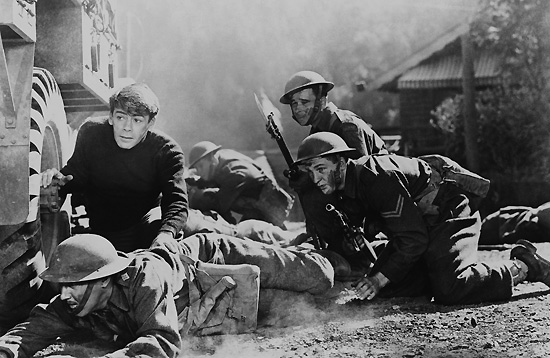
Scene from "Commandos Strike at Dawn" (1942).
Source: CCn’C Records CD (My rip)
Formats: mp3(320), DDD Stereo
File Size: 153 MB (incl. covers & booklet)
Download Link (mp3) – https://mega.nz/#!5ewgSCbC!PKeEewSbZgKV2L6Oqlyfud2cfSG6Zdi9Pyt11sEdSEE
Enjoy! Don’t share! Buy the original! Click on "Reputation" button if you downloaded this album! 🙂
Late Romantic/Modern: Jazz
Richard Strauss once claimed that he could translate anything into musical sounds, that he could take even the events
of something so mundane as the process of eating — using one utensil and then another, sampling this dish and then that one —
and craft a musical equivalent. He put his own claim to the test when composing the Sinfonia Domestica, Op. 53, of 1902-1903;
here is a tone poem (it is not strictly called such, but it is certainly not a real symphony either) whose subject is not a figure of legend
, as in Don Juan, or the mysteries of Death and Transfiguration, or a portrait of the composer as hero, as in Ein Heldenleben, but
rather a simple day in the life of a family man. The Sinfonia Domestica is a warm, tender, and often lightly humorous work, scored
for a massive orchestra (Strauss even adds four saxophones to his orchestra). It received its world premiere all the way across the
Atlantic Ocean during a 1904 festival of Strauss music in New York City. Strauss originally wrote many programmatic indications in
the score of the Sinfonia Domestica, but he eventually opted to take almost all of them out. Still, even without them, the "action"
is easy enough to follow.
Harlem is a symphonic jazz composition by the American composer Duke Ellington. Originally commissioned by
Arturo Toscanini in 1950 as part of a larger New York City???inspired orchestral suite, Toscanini never conducted it. Ellington himself
first recorded it on 7 December 1951 (as "A Tone Parallel to Harlem (Harlem Suite)" for his Ellington Uptown album), and it
had been given its live premiere on 21 January 1951 in a benefit concert for the NAACP at the Metropolitan Opera House. It was first
performed by symphony orchestra in 1955 at Carnegie Hall by Don Gillis and the Symphony of the Air. The piece lasts for around fourteen
minutes and exists in Ellington’s large jazz orchestra version as well as a full symphonic version orchestrated by Luther Henderson.
Both versions begin with a distinctive trumpet solo which intones the word "Harlem."
Igor Stravinsky’s forays into the world of jazz (or at least his plundering of jazz idioms and devices) resulted in a handful
of works that, while by no means the equal of such warhorses as The Rite of Spring or the Piano Concerto, nevertheless demand
that we find for them a place in our basic appreciation of the composer’s work. The tiny Praeludium of 1936-7 has the distinction
of being the first of them. Praeludium, the original version of which has never actually been published (the 1953 reorchestration
of the piece was published during the 1960s), is a work that takes barely over a minute to perform; it is thus both compact and witty,
and shows how, once again, Stravinsky could absorb musical elements seemingly foreign to his own compositional language to both
good effect and impeccably good taste.
Music by Richard Strauss, Duke Ellington & Igor Stravinsky
Played by the MDR Leipzig Radio Symphony Orchestra
Conducted by Kristjan J???rvi
"Kristjan J???rvi is the youngest member of the talented J???rvi family of musicians, which is headed by world-renowned conductor
Neeme J???rvi, Kristjan’s father. Kristjan’s siblings are Cincinnati Symphony Orchestra conductor Paavo J???rvi and flutist Maarika
J???rvi. Kristjan has established quite a successful career as a conductor of classical music in his own right, but, with his Absolute
Ensemble, has also delved into other genres of music, including rock.
Kristjan J???rvi was born in Tallinn, Estonia, then a part of the Soviet Union. The J???rvi family immigrated to the United States in
1980, and Kristjan was raised and educated in Manhattan. He studied piano at the Manhattan School of Music, where his teachers
included Nina Svetlanova. Further piano instruction came from master classes he attended at the Salzburg Mozarteum conducted
by Tatiana Nikolayeva, and in Israel by Arie Vardi and Viktor Derevyanko.
Absolute MixJ???rvi’s exposure during his youth to various musical styles in New York led to his establishment of the Absolute
Ensemble in 1993, an eclectic group since praised for its performances of both Baroque and rock compositions. Based in New
York, the ensemble has regularly made tours of the United States and Europe, and received a German Record Critics Award
in 2000 for its disc Absolute Mix, issued on the Ccn’c label.
In 1998 J???rvi was appointed assistant conductor of the Los Angeles Philharmonic Orchestra and held the post through 2000.
The year he left Los Angeles he was given a principal conducting post in Sweden, at the Norrlands Opera and Symphony
Orchestra of Ume???. Meanwhile, he continued concertizing and recording with the Absolute Ensemble, and appeared
ubiquitously as guest conductor of numerous orchestras, including those in Gothenburg, Detroit, and Bamberg, the Royal
Stockholm Philharmonic and Russian National orchestras, the Tallinn Chamber Orchestra, and many others. It was with the
Tallinn ensemble that J???rvi made a recording of flute music with his sister Maarika. The 2001 CD, also on the Ccn’c label,
featured works by Peter V???hi and Urmas Sisask.
Ezequiel Vi???ao: Arcanum In 2004 J???rvi left his post at Ume??? to accept the appointment of principal conductor of the
Vienna-based Tonk???nstler Orchestra. Absolute Ensemble’s 2005 release Arcanum, which contains a selection of chamber
and vocal pieces by Messiaen prot???g???e Ezequiel Vi???ao, has also garnered much praise. In 2010, J???rvi became an exclusive
Sony artist, and his first release for the label, Cantique, included the premiere recording of Arvo P???rt’s Stabat Mater."
Source: Naive CD (My rip)
Formats: mp3(320), DDD Stereo
File Size: 154 MB (incl. covers & booklet)
Download Link (mp3) – https://mega.nz/#!QP5RxJbR!OX7_GTdiO7LGk11zVcUlFscXNPpvHuh64BIvP2BcYQE
Enjoy! Don’t share! Buy the original! Click on "Reputation" button if you downloaded this album! 🙂
Modern: Americana
Aurora Orchestra???s ROADTRIP takes listeners on a journey across America with a programme that juxtaposes
core American compositions by John Adams, Charles Ives and Aaron Copland with specially commissioned folk/pop-song
arrangements by young American composer Nico Muhly, including Paul Simon???s hit ‘Hearts and Bones’. The collaborations –
with Muhly and American singer-songwriter guest soloists Sam Amidon and Dawn Landes – are inspired and refreshing; words
that have become synonymous with this dynamic British ensemble.
Music by John Adams, Aaron Copland & Charles Ives
Played by the Aurora Orchestra
With Sam Amidon (voice) & Dawn Landes (voice)
Conducted by Nicholas Collon
"Road Trip, the Aurora Orchestra???s first release for Warner Classics, is conceived as a musical journey through the
landscape of a mythical America. Three of the works discovered en route are classics of 20th-century American music,
by Charles Ives, Aaron Copland and John Adams, while the other stopping points are three songs arranged by
Nico Muhly and featuring folk singers Sam Amidon and Dawn Landes.
I???m not sure how convincing the connections between all these elements are, but it is an imaginative and carefully
thought out scheme, and certainly becomes a highly attractive package when it???s performed with the panache that
the Aurora Orchestra and its conductor, Nicholas Collon, bring to everything. Their performance of Adams???s Chamber
Symphony has real rhythmic snap, pungency in the instrumental textures, and just the right edge of aggression; the
last of Ives???s Three Places in New England, The Housatonic at Stockbridge, becomes a wonderfully subtle study in
drifting textures with the ghostly presence of a hymn tune threading through it. Best of all is Copland???s Appalachian
Spring, which the Aurora performs in the original (and to my mind, always the most effective) scoring for 13 instruments,
managing to conjure up its perfect marriage of folksy naivety and art-music sophistication, which can easily get lost
in the versions for full orchestra.
But Muhly???s arrangements are fascinating too, and sometimes recall one of the best of his own works, The Only Tune,
a haunting deconstruction of a folk ballad that also featured Amidon. Here, he adds a typically laconic yet immensely
suggestive and increasingly threatening accompaniment to Amidon???s singing of the broadside ballad Reynardine; and
adds more discreet reinforcement to his performance of Paul Simon???s Hearts and Bones, as well as creating a ticking,
tinkling instrumental web around Landes???s voice in The Brown Girl. All of them work perfectly."
Andrew Clements, The Guardian
Source: Warner Classics CD (My rip)
Formats: mp3(320), DDD Stereo
File Size: 167 MB (incl. covers & booklet)
Download Link (mp3) – https://mega.nz/#!vnZ1xbDQ!2Z5gyWJcNCSuPmoOp-m1il9-D_7TCN8cNNFTaeRg-EA
/>
Enjoy! Don’t share! Buy the original! Click on "Reputation" button if you downloaded this album! 🙂
Late Romantic
Alexander Glazunov’s colorful incidental music for the Lermontov play "Masquerade" exists only in manuscript.
Much of the dance music evokes Tchaikovsky’s great ballets, though the orchestration is somewhat more reminiscent
of Rimsky-Korsakov, Glazunov’s teacher. The Romantic Intermezzo, is lightweight and colorful and goes well with
the theme of this ballet.
Written at the same time as the extremely accomplished First Symphony, the Overture No.2 on Greek Themes is
big music indeed for a seventeen-year-old composer. Like its predecessor, the Overture No.1 on Greek Themes, it owes its
thematic inspiration to a collection of music made by the French composer Louis Albert Bourgault-Ducoudray, who was instrumental
in arranging the increased performances of Russian music in Paris. Dedicated to Balakirev, who conducted the first performance,
the Overture No.2 shows Glazunov’s melodic inspiration and mastery of orchestral textures at its early height.
The decadence and eroticism of Oscar Wilde’s French play "Salom???" was both a scandal and a musical inspiration. Within a few
years Florent Schmidt wrote his "The Tragedy of Salom???" and Richard Strauss wrote his opera, "Salome." This opera caused fresh
scandal and outrage, and rekindled interest in the original play. Glazunov agreed to write incidental music, comprising an introduction
and an accompaniment for Salom???’s famous dance, the most famous strip-tease in theatrical history. (All Wilde wrote for the scene
was the stage direction: "Salome performs the Dance of the Seven Veils"). This became one of the freshest and most colorful pieces
Glazunov had written in some years.
In the dramatic overture The Song of Destiny, Glazunov seems to be telling a personal story about his development of as a
composer. The Overture begins with a quotation of the famous motive from Beethoven’s Fifth Symphony (which is popularly
supposed to have been meant to represent Fate – or Destiny). Other musical influences are hinted at, including Brahms and
Wagner. It may represent the sudden impact that Wagner’s music had on him at an unexpected moment.
Music Composed by Alexander Glazunov
Played by the Hong Kong Philharmonic Orchestra
Conducted by Antonio de Almeida
"Born in Paris to an American mother and a Portuguese aristocrat father, Antonio de Almeida retained French citizenship
throughout his life and identified most closely with French culture. As a musicologist, he was the twentieth century’s leading
expert on the music of Jacques Offenbach. As a conductor, he applied himself to a wide range of repertory, notably opera,
but he worked especially hard to gain attention for neglected French music. His final project was to record all the symphonies
of Henri Sauguet and Charles Tournemire; he died of cancer just one disc short of his goal. (The engineer for these last discs,
incidentally, was Almeida’s son, Tony Jr.) Almeida’s godfather was pianist Artur Rubinstein and it was Rubinstein who persuaded
him to give up a scholarship to study nuclear chemistry at the Massachusetts Institute of Technology and switch to music.
Almeida had already studied musicology in Argentina with Alberto Ginastera, and he quickly took Rubinstein’s advice and
transferred to Yale, where he studied music theory with Paul Hindemith and conducting with Serge Koussevitsky and George
Szell. Almeida began conducting on Portuguese radio in 1949, and soon was appointed music director of the Oporto Symphony
Orchestra. There, he met guest conductor Thomas Beecham and within a year, Beecham invited Almeida to London to conduct
his Royal Philharmonic Orchestra. A busy guest-conducting schedule developed, as did a series of appointments as chief
conductor and music director: Portuguese radio from 1957 to 1960, the Stuttgart Philharmonic from 1962 to 1964, the
Op???ra de Paris from 1965 to 1967, and the Moscow Symphony Orchestra from 1993 until his death. For his efforts to
promote French music around the world, Almeida was named a Chevalier of the Legion of Honor in 1976, later rising
within that organization to the rank of commander. He was also elected a Commander of Arts and Letters in France in 1996.
While devoting much time to conducting and recording, Almeida also steadily worked as a musicologist. He became
co-artistic director of the Haydn Foundation with H.C. Robbins Landon in 1968. Almeida prepared performing editions
of all the Boccherini symphonies and compiled a thematic catalog of the works of Offenbach, which was not published
until shortly after his death."
Source: Marco Polo CD (My rip)
Formats: mp3(320), DDD Stereo
File Size: 123 MB (incl. covers & booklet)
Download Link (mp3) – https://mega.nz/#!vr5yXJRJ!399RKfHxiuhQHFvHPqgXCe9vHyKKfeJ4UJvtxUriYTM
Enjoy! Don’t share! Buy the original! Click on "Reputation" button if you downloaded this album! 🙂
Light Music
The Chinese composer Du Ming-Xin was born in 1928 in the province of Hubei. His early studies were in Chongqing,
but he later moved to Shanghai, a centre of musical influence. In the 1950s Du Ming-xin studied further in Russia, and
became a professor of the Central Conservatory in Beijing. Du Ming-xin???s compositions include a share in the famous ballet
score The Mermaid, written in collaboration with Wu Zu-qiang, and in The Red Detachment of Women . He also composed film sound-tracks, of which "The Savage Land" and "She Died Alone" are
widely known. Several of Du Mingxin???s composition students have already made names for themselves in China, Hong Kong
and the rest of Southeast Asia.
The [B]Ten Xinjiang Dances form a suite for violin and orchestra. The suite takes the folk-songs and instrumental music
widely popular in Xinjiang as its material and, by retaining the regional characteristics of the originals, the suite has
enriched its expressive power by means of variation and development, with the violin finding free scope for displaying
its melodiousness and various techniques.
Music Composed by Du Ming-Xin
Played by the Singapore Symphony Orchestra
With Takako Nishizaki (violin)
Conducted by Choo Hoey
"Located on the northwest border, the Xinjiang Uygur Autonomous Region is the largest provincial administrative area of
China. On a vast stretch of land of 1.6 million square kilometres resides a population of 13 million made up of 14 nationalities,
including the Uygurs, Hans, Kazakhs, Huis, Mongolians, Kirgiz, Sibos, Tajiks, Tartars, Daurs , Manchus, ???zbeks, Tibetans and
Russians. In ancient times, Xinjiang was known as Xiyu, the West Regions, and was an important channel for China???s cultural
and economic exchange with West Asia, Europe and Africa. The famous ???silk road??? cutting through Xiyu appeared about the
fourth century. Based on the inheritance of the ancient Xiyu music and on exchange with the music of Zhongyuan (the central
areas of China), India, Persia and Arab countries through the ages, the music of the various Xinjiang nationalities has gradually
developed into a rich modern form. Historically, the music of Qiuxi, an ancient Xiyu city-state near the present Kuche, once
effected a positive influence on the development of the Zhongyuan music. Today the colourful Xinjiang folk-songs and
instrumental pieces enjoy wide popularity among the people of all the nationalities throughout China."
Source: Marco Polo CD (My rip)
Formats: mp3(320), DDD Stereo
File Size: 114 MB (incl. covers & booklet)
Download Link (mp3) – https://mega.nz/#!G6YWGJoD!R1l6IRmKcZpymiD8Nt453JzBD8P09cveeCX3xhoMzB0
Enjoy! Don’t share! Buy the original! Click on "Reputation" button if you downloaded this album! 🙂
Light Music
Billy Mayerl was born on May 31, 1902, in London’s West End. His talent for the instrument was immediate, and by the age of seven
he was studying at Trinity College of Music. By his late teens he was earning decent money tinkling the ivories at dances and silent movie
cinemas throughout London and its environs. As a natural showman he enjoyed the attention. However, the gigs also afforded Mayerl
plenty of room to improvise, and this would come to influence his own compositional style. In 1922, Mayerl was in residency at a
Southampton hotel when he was discovered by bandleader and saxophonist Bert Ralton, who recruited the pianist for his Havana
Band at London’s Savoy Hotel. Mayerl’s charismatic style was a hit. Listeners loved his classically inspired yet flashy style, which
incorporated nimble finger runs and fluttery, crowd-pleasing melodies. Between 1923 and 1926, he was a featured soloist for the
band’s frequent BBC radio performances. The steady work allowed him to marry his sweetheart, fellow pianist Jill Bernini, and also
afforded him the opportunity to record some of his own compositions. In addition, he gave the first British performance of Gershwin’s
"Rhapsody in Blue," on October 28, 1925.
But it was the sunny melody and lighthearted, lightning-fast keyboard work of Marigold that made it his signature tune.
Upon his death from a heart attack in 1959, "Marigold" remained his most memorable composition.
Music Composed by Billy Mayerl
Played by the Slovak Radio Symphony Orchestra
Conducted by Gary Carpenter
"Since we nowadays think of Billy Mayerl almost entirely in terms of his piano output, he was perhaps not the most obvious
candidate for inclusion in Marco Polo’s light music series. However, such is the burgeoning interest in the composer, that this
collection will undoubtedly find a particularly warm welcome. Most of the items are in fact orchestrations of novelty pieces
that will already be familiar in piano performances. Eight of the 21 tracks are orchestrated by Mayerl himself, the others
being the work of various orchestrators who themselves include some noteworthy names in British light music Ray Noble
for the Four Aces suite, Hubert Bath for From a Spanish lattice, Herman Finck for Autumn Crocus and Arthur Wood for
Pastoral Sketches.
The version of Marigold, which opens the collection, is not a straight orchestration of the piano piece but Mayerl’s own
dance-band arrangement. And what a splendidly evocative period sound it is! Other arrangements of the novelty items are
in similar vein; but there are also pieces specifically intended for orchestra and very different in style???the Pastoral Sketches,
written for the Boosey ”Light Music Catalogue”, and three late compositions orchestrated by Mayerl, namely Minuet by
Candlelight, Waltz for a lonely heart and the rousing Busybody."
Gramophone
Source: Marco Polo CD (My rip)
Formats: mp3(320), DDD Stereo
File Size: 179 MB (incl. covers & booklet)
Download Link (mp3) – https://mega.nz/#!7ihFUahZ!Da3G-oIcqn0Oq-xJqRrxNlCSoDAht5OyqirD-aujW6E
/>
Enjoy! Don’t share! Buy the original! Click on "Reputation" button if you downloaded this album! 🙂
Ethnic/Light Music
The Five African Songs, originally arranged for massed choirs by Mzilikazi Khumalo (*1932), are presented here in an
orchestra-alone version arranged by P???ter Louis Van Dijk (*1953) – and they would make splendid film music. Van Dijk
himself composed the two most substantial works on this album: the San Gloria for choir and orchestra, and the related San Chronicle
for small orchestra. San Gloria, inspired by San (or Bushman) themes and rhythms attempts to blend the music of these gentle,
virtually extinct and ancient African people with an abridged version of the ancient (and virtually extinct) Latin poem Gloria in excelsis Deo.
This work seeks to represent two totally unrelated cultures???both ancient, symbolic and relevant in their own right???thereby highlighting
exactly those elements in Southern African society which, at times, excite us and sometimes mutually exasperate. While San Chronicle is
not specifically programmatic, the work does contain many sounds and symbols associated with Bushman life: the wide open spaces of the
Kalahari, the San???s reticent, private nature, his sense of humour, his singing and dancing, the pronking of the Springbok, the celebration of
the hunt, the plaintive and prophetic song of the Mantis and the Moon (English horn solo), but most of all, a sense of foreboding and decay:
a chronicle of the inevitable virtual annihilation of these gentle folk.
Samuel Akpabot was born in the Etinan district of Eastern Nigeria. As a young man, he showed unusual musical talent and studied
Western music with European-trained teachers. Later he was awarded a bursary to study organ, trumpet and composition at the Royal
College of Music in London. Several of Akpabot???s compositions juxtapose African and European instruments, while others, like
Three Nigerian Dances, use Western instruments only (strings and timpani in this case). The Dances do, however, convey a
genuine sense of West African musical characteristics with their use of ???call and response??? patterns and idiomatic rhythmic motives.
Music by [see above]
Played by the National Symphony Orchestra of the SABC
With the SABC Chamber Choir
Conducted by Richard Cock
"The performances are accomplished and often imbued with a great sense of Commitment…
This is an unusual but interesting recording which will probably win over most listeners
who give it a chance."
Fanfare
Source: Marco Polo CD (My rip)
Formats: mp3(320), DDD Stereo
File Size: 152 MB (incl. covers & booklet)
Download Link (mp3) – https://mega.nz/#!SiIg1LiJ!moRcxe7BHUOs1wRMzypjSybN_L1AAmnF0hGqRNQfLuA
Enjoy! Don’t share! Buy the original! Click on "Reputation" button if you downloaded this album! 🙂
Light Music/Romantic
Fini Henriques (1867-1940) was a Danish composer and violinist. He took private lessons with Valdemar Tofte
and Johan Svendsen, and studied additionally in Berlin ??? Niels W. Gade, head of the Royal Danish Academy of Music
advised him not to apply to the Academy. From 1892-96 he was employed at The Royal Danish Orchestra, but left in
order to focus on playing chamber music.
Due to his energetic and often humorous performances as a violin virtuoso, he was very popular in his time.
His music is also characterized by a profound understanding of methods of expression and a passion for playing.
Henriques??? most well-known compositions are the ballet Den Lille Havfrue (???The Little Mermaid???) (1909)
and V???lund Smed (???Wayland the Smith???) (1896). He also wrote chamber music, songs and other small pieces.
Music Composed by Fini Henriques
Played by the Helsingborg Symphony Orchestra
With Christina Astrand (violin) & Max Artved (oboe)
Conducted by Giordano Bellincampi
"Light, charming, unpretentious, and tuneful, Fini Henriques??? (1867-1940) music recalls happier times and
a more elegant, civilized era (which never really existed, but never mind). As a composer of ???pops??? favorites,
he certainly deserves his high standing in Denmark, and this lovely disc should make him many friends elsewhere.
Everything here is simply delightful, from the witty and not terribly demonic Devil???s Dance for violin and
orchestra, to the charming ???Gallop??? taken from his ballet The Little Mermaid. The Suite in F for oboe and
orchestra ought to enter the repertoire of enterprising oboists everywhere, and the most substantial work
here, the incidental music from Wayland Smith, shows the composer at his colorful and tuneful best.
Giordano Bellincampi leads the Helsingborg Symphony Orchestra and the two fine soloists in enthusiastic,
loving performances and they???re vividly recorded too. There???s really nothing else to say: if you enjoy
exploring the nooks and crannies of high quality ???light??? music, you???ll find this a disc to treasure."
Classics Today
Source: Dacapo CD (My rip)
Formats: mp3(320), DDD Stereo
File Size: 137 MB (incl. covers & booklet)
Download Link (mp3) – https://mega.nz/#!j3QxESpR!lXhibtJPD5RyeIa0ahyv5mKcmlnInxJa853BIbmZkbg
Enjoy! Don’t share! Buy the original! Click on "Reputation" button if you downloaded this album! 🙂
Impressionism/Romantic Nationalism
This programme of music by Irish composer Ina Boyle (1889-1967), a one-time student of Vaughan Williams,
collates several of her major orchestral works. The rhapsodic Violin Concerto of 1935 is in three continuous
movements, and both conductor Ronald Corp and soloist Benjamin Baker interpret the music with sympathetic
attention to detail, maintaining its natural ebb and flow. Boyle wrote three symphonies, and this disc presents the
long overdue recording of the First Symphony, subtitled "Glencree" (In the Wicklow Hills), which dates from 1924-27.
The young cellist Nad???ge Rochat gives a powerful reading of the Psalm for cello and orchestra, written in 1927,
while four short but captivating orchestral pieces complete the programme – which reveals Ina Boyle as a composer
of originality and invention.
Music Composed by Ina Boyle
Played by the BBC Concert Orchestra
With Benjamin Baker (violin) & Nad???ge Rochat (cello)
Conducted by Ronald Corp
"Among Northern Ireland’s twentieth century composers Harty and Ferguson have been reasonably well served. Both had
reputations as distinguished practical musicians: Ferguson in his self-sacrificing support for Finzi in the songs and elsewhere;
Harty as conductor of the Hall???. Appreciation of their own music followed on the coat-tails of those reputations. What, however,
of two others: Ina Boyle (1889-1967) and Norman Hay (1889-1943)? I certainly hope that Hay will be recorded, not least for
his Tintagel-like tone poem Dunluce and his Yeats sequence for voice and orchestra, The Wind Among the Reeds, both revived
by the BBC and RT??? in the last quarter century. There have been stirrings for Boyle, a pupil of Ralph Vaughan Williams and
friend and contemporary of Elizabeth Maconchy, including the Elegy for cello and orchestra and the Carnegie Award-winning
tone poem The Magic Harp, the latter taken up by Dutton. That said this is the first time Boyle’s music has been treated to a
single-composer anthology of her orchestral works. It is here performed with sympathetic insight and some rejuvenating zest.
Boyle’s Overture was well thought of by Vaughan Williams; no wonder. Lively innocence, occasionally soulful pages, airy
poetically melancholic textures (7:01) and folksy vitality place it midway between Vaughan Williams’ Poisoned Kiss overture
and Moeran’s Overture to a Masque. The overture ends gently in a poetic breath rather than an outdoorsy whoop. It’s not
especially ‘Irish’ in the sense of Harty’s Irish Symphony. It was premiered by Jean Martinon and the Radio ???ireann orchestra
in 1948. Sadly, it lacks only a catchy title. The poetic Violin Concerto is all over in three movements and in just short of 17
minutes. Another work of the 1930s, it has more in common with RVW’s Lark Ascending than with the big British Isles
statements (Bax, Walton, Dyson??? Creith and Moeran) of that decade and is none the worse for that. Its contemplative,
affectionate melancholy is understandable given that it is dedicated to Boyle’s mother who had died in 1932. Even the final
Allegro is qualified with a "ma non troppo". It reminded me of another genuine ‘unshouty’ British concerto – that by John
Jeffreys, recorded on Meridian. The Boyle concerto also ends on a gentle gesture. Benjamin Baker is a faithful and attentive
advocate for this unflashy score. I see that the work was rehearsed with the BBC by Andr??? Mangeot, conducted by Aylmer
Buesst but never attained a broadcast at that time.
Symphony No. 1 Glencree has been heard in recent years as part of RT???’s Composing the Island series in 2016 (program
notes). Its three movements are: 1. On Lacken Hill; 2. Nightwinds in the Valley and 3. Above Lough Bray. The soft lyrical
contours of the first sing in a typically open way that brackets RVW’s Pastoral and Moeran’s First Rhapsody and
In the Mountain Country. There are affecting solos for oboe and trumpet. Breaking the spell, the short middle movement
at first lashes along. Although not as lush and romantically dense, its sturdy storm-clouds are typical of Harty’s
With The Wild-Geese. That said, Boyle returns to her true North with pages of Tranquillo. The impressive finale is more
darkly flecked but with strong parallels drawn with Vaughan Williams at his most intense. It too ends thoughtfully
without bravado or heroics.
Wildgeese – the latest work here – is described as a "sketch for small orchestra". Its melancholy, languor and romantic
"Dover Beach" swell recalls Constant Lambert’s Aubade H???ro???que. The soloist in Psalm for cello and orchestra has also
recorded Boyle’s 1913 Elegy. Nad???ge Rochat is commandingly placed in the audio picture without obscuring the orchestral
detail. The music on occasion touches base with the Copland of Appalachian Spring, a score then lying many years in the
future. A Sea Poem: "Theme, variations and finale" is the earliest work here. There are six variations which, with the
other sections, are helpfully laid out in eight tracks. The writing strides along a pathway marked out on one side by the
lighter Elgar and on the other by Rimsky-Korsakov. On the evidence of the other works here this is Boyle finding her
way towards her own voice rather than being typical of her maturity. That said, the last track (tr.18) (which I initially
and erroneously thought was the Colin Clout "SACD Bonus track") is a sun-warmed pastoral and fits well into the green
lyrical traditions of the British Isles.
As for the Colin Clout track this is said to have found its inspiration in one of Edmund Spenser’s eclogues. It’s referred
to by Dutton as an "SACD Bonus Track". Judgment on that nine minute piece will have to be deferred until the track is
playable or a revised disc issued or download made available. I am grateful to Colin Mackie for pointing this out and
identifying my error in ascribing the Finale of Sea-Poem to this piece.
It seems that there are many other Boyle works of interest including two other numbered symphonies (1930, 1951).
Glencree has been heard in part before. One movement of it was on RT??? Lyric FM CD153.
These premiere recordings, which sound very well indeed, were produced in association with BBC Radio 3. In case
you have any anxiety about the circa 84-minute playing time my experience was that I had no difficulty playing
this disc on a conventional CD player: no blips or stutters. More to the point, the music-making here is personable,
tuneful and completely approachable."
Rob Barnett, Musicweb
Source: Dutton Epoch CD (My rip)*
Formats: mp3(320), DDD Stereo
File Size: 185 MB (incl. covers & booklet)
Download Link (mp3) – https://mega.nz/#!Oi4mkSKR!Lqy3ZsxEnEipmN1w6ZWNMzcqP4TJ2Urx1Mx0WMtOJOM
missing SACD track (Colin Clout) – https://mega.nz/#!7r4DRJBI!uQRweZ6rXjrseT50RYD_SICOO3YiZFdvAdbZujMOjYA
Enjoy! Don’t share! Buy the original! Click on "Reputation" button if you downloaded this album! 🙂
Paul S.
Light Music
Light music???s golden years were during the first half of the twentieth century. Of the countless composers who wrote for the middlebrow
listeners of seaside and festival orchestras, salon groups, caf??? orchestras and broadcasting light orchestras, the name Eric Coates stands
out as a master composer of beautiful melodies and wonderful orchestrations enhanced with a refinement, sophistication and truly symphonic
orchestral sense that few light-music composers could match. Born in Nottinghamshire in 1886, Coates had a pedigree classical training at the
Royal Academy of Music, with Frederick Corder for composition and Lionel Tertis for viola. He became a freelance viola player, rising to principal
viola of Henry Wood???s Queen???s Hall Orchestra in 1913, where no doubt he would have played in many first British performances. He left in 1919
to dedicate his lime to composing songs and light music, writing (in all) 160 songs, thirteen suites, four phantasies, one ballet, seventeen
marches and 24 other short orchestral works. His contract with his publisher Chappells called for one major orchestral work a year, that is a
suite or phantasy, and one short orchestral piece, such as a waltz, a march, a serenade or a romance. This CD contains a selection of
these major and shorter orchestral works.
Music Composed by Eric Coates
Played by the Slovak Radio Symphony Orchestra
With Kenneth Edge (saxophone)
Conducted by Andrew Penny
"Andrew Penny was born in Hull and entered the Royal Manchester College of Music in 1971 to study the clarinet
with Sidney Fell. As a postgraduate he was the first holder of the Rothschild Scholarship in Conducting at the Royal
Northern College of Music, studying with Sir Charles Groves and Timothy Reynish, subsequently receiving the Ricordi Prize.
He gained invaluable experience with the Opera Unit during this time and was associated with many of the operas presented
by the college in its early years both in Manchester and at Sadlers Wells Theatre. He also studied with Sir Edward Downes
on courses in Holland and on the BBC Conductors Seminar in 1985. Since 1992 he has made over 35 recordings for the
Naxos and Marco Polo labels. Much of the repertoire is of British Music and includes symphonies by Sir Malcolm Arnold
and Havergal Brian, film music by Vaughan Williams and Walton, theatre music by Sullivan and Holbrooke and light music
by Coates and Arnold. His complete cycle of the nine Symphonies by Arnold was produced in time for the composer???s
eightieth birthday in October 2001 and has subsequently become BBC Music Magazine???s top recommendation. In the
Gramophone Awards of 1999 the Editor???s Choice Award was made to 22 Naxos discs as an outstanding contribution
to 20th-century British Music. Three of those releases were conducted by Andrew Penny; the Arnold Third and
Fourth Symphonies (8.553739) and two discs of Walton???s music for the Olivier films of Shakespeare???s Henry V,
Hamlet and As You Like It. In October 2010 his premi???re recordings of the complete Shakespearean Overtures
by Mario Castelnuovo-Tedesco were released on two Naxos discs (8.572500 & 8.572501). Andrew Penny became
musical director of the Hull Philharmonic Orchestra in 1982."
Source: Marco Polo CD (My rip)
Formats: mp3(320), DDD Stereo
File Size: 146 MB (incl. covers & booklet)
Download Link (mp3) – https://mega.nz/#!e3IlwSgD!vb3ZOC0MC377NKK8_m2dL3uzFK3Om1b4suhTPGHOENo
Enjoy! Don’t share! Buy the original! Click on "Reputation" button if you downloaded this album! 🙂
Modern: Tonal
At first glance, Sergei Prokofiev’s masterful Cantata for the 20th Anniversary of the October Revolution – based on
texts by Karl Marx and Vladimir Lenin that extol the Bolshevik revolution — would seem to be a hymn to the Soviet Socialist state.
However, it is in fact quite satirical. This element of satire was overlooked for many years because of the 30-year delay in the work’s
premiere (an abridged premiere, at that), by which time the social commentary was no longer current. The huge forces listed in the
headnote (including two full choirs and an enlarged orchestra) do not quite convey the size of the ensemble Prokofiev called for.
He also included a brass band, an orchestra of accordions, and a speaker, bringing the total number of performers to about five
hundred. The work is divided into ten movements, beginning with a dissonant and grim orchestral "Prelude." There follows
"The Philosophers," whose combination of rhythm and lush melody make this one of Prokofiev’s most memorable choral creations.
"A Tight Little Band," is framed by two interludes, the last of which is raucous and augurs the coming number, "Revolution."
Once Stalin’s reign of terror began in 1937 — the year this work was completed — Prokofiev withdrew it and abandoned ideas
of a performance during his lifetime. He certainly feared the dire consequences that befell so many other Soviet artists of the
period, like theater director Vsevolod Meyerhold, arrested in 1939 and executed in 1940.
Eventually, parts of the Cantata became film music when James Horner ripped off "The Philosophers" for his score "Red Heat". 😉
Flourish, Our Mighty Land! (Cantata on the 30th Anniversary of the October Revolution) lasts less than ten minutes in
performance and is a relatively modest work, especially when compared with the previous work. Finished during Stalin’s first
reign of terror, Prokofiev wisely withdrew it and the work was never heard in his lifetime. In this Op. 114 choral piece he
deliberately kept the music simple, refusing to give it the grandiosity Soviet arts commissars wanted. Using a text by Evgeni
Dolmatovsky, Prokofiev opens the work with a charming march played on the trumpet. The mixed chorus then enters to introduce
a rather solemn but attractive theme a cappella. For the remainder of the work the chorus dominates the proceedings,
with the orchestra relegated to an accompanimental role and brief musical commentary between choral passages,
although it does reprise the opening march at the close.
Finished during Stalin’s first reign of terror, Prokofiev wisely withdrew his A Toast! (Hail to Stalin) and the work was
never heard in his lifetime. In this Op. 114 choral piece he deliberately kept the music simple, refusing to give it the grandiosity
Soviet arts commissars wanted. Using a text by Evgeni Dolmatovsky, Prokofiev opens the work with a charming march played
on the trumpet. The mixed chorus then enters to introduce a rather solemn but attractive theme a cappella. For the remainder
of the work the chorus dominates the proceedings, with the orchestra relegated to an accompanimental role and brief musical
commentary between choral passages, although it does reprise the opening march at the close.
Music Composed by Sergei Prokofiev
Played by the New Philharmonia Orchestra of Russia
With the St. Petersburg Philharmonic Choir
Conducted by Alexander Titov
"You will need to see past the political and historical apparatus to appreciate this. It’s worth the effort. After all, Prokofiev
could not help writing out of his untempered imagination regardless of the circumstances that called forth the creative spark.
Still, there are whole paragraphs where it’s a blessing to English-speakers that these performances are, quite rightly, sung
in Russian.
The epic 20th Anniversary cantata begins with a prelude that is all brassy growls and snarls. The Philosophers movement
is fiercely aspiring and suggests Prokofiev could not get the Romeo and Juliet ballet out of his head. This aspiring theme
is contrasted with some Orff-like ostinati. The following Interlude is ponderous and sinister. Prokofiev was a brilliant film
music composer and this section sounds like a clay golem coming to horrific life. The savagery of We are marching in close
ranks prepares the way for the savagery of another Interlude and a wall-shaking brass battle. Revolution opens to haunting
effect with high women’s voices and the men featuring in a whispered night march. Soon the words are spat out vehemently.
The next pages take us through a massive deafening blast with drum salvos before the men reappear, singing at breathless
speed. Rolling horns can be heard braying en masse. Trumpets shriek and bayans (inevitably queasy-sounding folk accordions)
dance (7:00). The orator shouts loud but his voice is not caught with the clarity to be found in the Chandos/J???rvi version.
On the other hand Titov’s air raid sirens (8:30) are more imposing than on Chandos. Victory is celebrated through sweet
singing which rises to a glorious glowing bloom (3:10). At 3.42 the women’s voices find the high uplands of hope caught
in descant with the trumpets (4:00). These are evidence that the fruity warble has not yet been expelled from Russian
brass – long may it stay in the cause of individuality. Let’s not have them sounding like the Chicago or Berlin benches.
The pledge takes the form of a typically Slav subdued march, gloriously contained, with the poetically understated
bayans putting in a fresh appearance (3.49). Part IX is called Symphony: it includes a helter-skelter rush (Romeo and
Juliet and Kij???), some gawkily progressive pages and a glowing upbeat (Symphony No. 7). The final section is
Constitution. It begins in forbidding mood but the women’s voices rise high towards starry skies. The feet of the
People stand firmly planted with a piano providing a grounding ostinato. Things come to a close with an indomitable
march transformed into a rising optimistic up-blast.
The 20th Anniversary cantata was recorded first by Melodiya with Kondrashin conducting in 1965. HDTT resurrected
that experience but the work was savagely cut – shorn down to 31:15, being minus ten-plus minutes of Stalin adulation.
Titov has the unexpurgated work running to 44:13 while Jarvi on Chandos takes 46:32. The recent Praga disc doesn’t
really count as it is of extracts only and is not the ‘main act’."
Musicweb
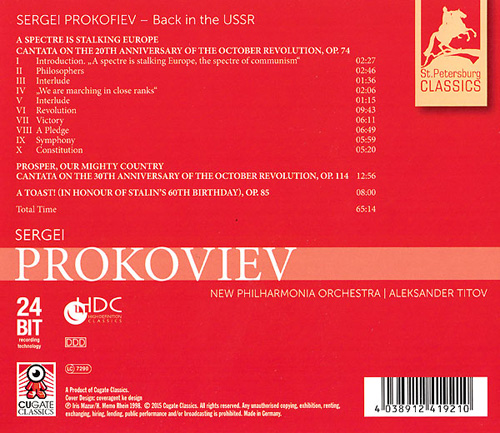
Note: The order of the shorter works is wrong. Track 11 has "A Toast!",
while track 12 features the short "30th Anniversary Cantata".
Source: CuGate Classics CD (My rip)
Formats: mp3(320), DDD Stereo
File Size: 165 MB (incl. covers & booklet)
Download Link (mp3) – https://mega.nz/#!nrhTULaQ!q4cgnH5yZ0Su0XL09P12gUiKyBBKRuNtg91Shmaoew8
Enjoy! Don’t share! Buy the original! Click on "Reputation" button if you downloaded this album! 🙂
Late Romantic
Prominent Viennese music critic Julius Korngold must have known exactly how Leopold Mozart felt. Just as the elder Mozart had
watched the astonishing development of his son Wolfgang, Julius saw his own son Erich Wolfgang Korngold developing musical
talents so rapidly and spontaneously that the boy fully lived up to his middle name. Erich burst on Vienna as child who stood out
even among the great Wunderkinder of history. When he was 11 he wrote an opera, Der Schneeman (The Snowman), that was
performed at the Vienna Opera House in 1910. Although the eminent composer Alexander von Zemlinsky did the orchestration,
young Korngold watched him do it, and that seems to have been all he needed in the way of orchestration lessons. The great
conductor Arthur Nikisch conducted the boy’s first overture when Erich was 14.
By that time Erich was writing this Sinfonietta. The modest title conceals what is no less than a full-scale (45-minute)
symphony for large orchestra. In it Korngold’s mature style is present, nearly completely formed. It is in the key of B (in German
notation, the key of H), a tonality that is especially bright because of its five sharps. Korngold’s formal sense and control over his
material is utterly astonishing. The entire work is based on a single theme, making prominent use of what the composer called
"The Motif of the Cheerful Heart." (An upbeat attitude is also characteristic of Korngold’s music and is certainly the dominant feeling
of this Sinfonietta.) This motive is three upward perfect fourths (for instance, B, E, A). His rich harmonization is already
well ahead of its time. While his contemporaries were deserting tonality in order to use all 12 chromatic notes, Korngold wrote in
a kind of extended polytonality, using all 12 notes as adjuncts to a central tonality. The layout of the Sinfonietta is that of a standard
symphony with a scherzo and trio placed second among the four movements.
Korngold’s most popular movie scores included King’s Row, The Sea Hawk, Anthony Adverse, and Robin Hood. But despite the
acknowledged quality of his works for the silver screen, it would be idle to pretend that these served greatly to enhance
Korngold’s repute as a "serious" composer. What did help enormously in this regard was the support and patronage of great
artists, among them the celebrated violinist Jascha Heifetz, for whom Korngold composed his Violin Concerto in D, Op. 35,
during 1945. Other key orchestral works by Korngold included a cello concerto for Piatigorsky, and a brilliantly accomplished
Symphony in F sharp minor. The Violin Concerto is an unashamedly romantic work, with a vibrantly cinematic character,
begging the lie that no "hack" celluloid composer could write a work that not only ranked as one of the best concertos of its time,
but also retained the populist feel of a Hollywood movie in the unforgettable contouring of its thematic material. The concerto
comprises three movements.
Music Composed by Erich Wolfgang Korngold
Played by the Dallas Symphony Orchestra
With Ulrike-Anima Math??? (violin)
Conducted by Andrew Litton
"This must be amongst the crowning achievements of Dorian – a company noted for its professional presentation as
much for its low profile on the world market. Confounding (my) prejudiced expectations of tungsten carbide soulless
playing the Texan orchestra play their hearts out in a Sinfonietta that for me jostles for first choice with Bamert on
Chandos. The Sinfonietta is neither small in dimensions (at circa 45 mins – longer than most symphonies) nor in
breadth of mood. There is a lightness and lift about it which perhaps merits the description as well as an avoidance
of bitter tragedy – but then this was written by a composer in his mid-teens. The ideas tumble out in luxuriant
profusion and each idea has staying power. Forget the played out references to precocious child prodigies. This music
is wondrously mature and it has, settled over its contours, a star-dust enchantment. Reference points include Strauss,
Zemlinsky, Joseph Marx, Schrecker and Delius. The movement which will leave you with your heart in your mouth is
the tr???umerisch third which, if you have never heard this work before, will leave you with a sense of wonder. I am
listening to it now as I write and the goose pimples are running up my arms. Korngold had genius there is no doubt
about that. The dewfall motif at 1.42 [track 3] is beyond price but there are so many such moments in this affluently
generous souled work. Bamert is quite as good and as well recorded. Gerd Albrecht (Varese-Sarabande) and
Werner Andreas Albert (CPO) are not quite as well served by their orchestras.
Then we come to the violin concerto. For years this was the province of Heifetz (1953 recording) whose violin sat
inside our head as well listened so assertive was the RCA Victor recording balance. Then along came Ulf Hoelscher (EMI)
who was accorded a far more ‘democratic’ balance. Gil Shaham (DG) I have not heard but friends speak highly of this.
Ms Math??? (rather like Chantal Juillet in her Decca Entartete series disc) treats the music with dignity and allows it to
breathe where Heifetz hectors and presses the music forward. The music does not need to be force-fed to the listener.
The mood is wonderfully sustained by soloist, orchestra and conductor and I dare to say that these sessions must have
been models of happiness. Recording quality: open and subtle. Notes by Korngold biographer Brendan G Carroll –
a model balance between pleading and information. A classic of recorded sound."
Musicweb
Source: Dorian Recordings CD (My rip)
Formats: mp3(320), DDD Stereo
File Size: 180 MB (incl. covers & booklet)
Download Link (mp3) – https://mega.nz/#!GvIWhLZQ!gNaE0v60tHGT5_A0ljT0jp9dvPg7BJZO76fG8aDkEpo
Enjoy! Don’t share! Buy the original! Click on "Reputation" button if you downloaded this album! 🙂
Late Romantic/Modern: Tonal
Austrian-German composer Franz Schreker (1878-1934) made his first great public success with his ballet/pantomime
Der Geburtstag der Infantin based on the novella by Oscar Wilde. Composed in ten days in 1908, Der Geburtstag was
the centerpiece of a Gesamtkunstwerk arranged by the Jugendstil painter Gustav Klimt for the opening of the Kunstschau Wien
(Vienna Art Show) on June 27 of that year. Combining Schreker’s music with the paintings of the exhibition, plus dancing, architecture,
literature, staging, and even garden design, Klimt’s Gesamtkunstwerk went far beyond even Wagner’s Bayreuth. While the ballet-
pantomime was written for string orchestra, the suite Schreker drew from it is arranged for very large orchestra, including two
harps and four guitars. Arranged in 1923 and dedicated to Willem Mengelberg and the Concertgebouw Orchestra Amsterdam,
the piece was premiered by the dedicatees on October 23 of that year.
In his Tanz-Suite for chamber ensemble, with prominent percussion, Ernst Toch (1887-1964) comes to terms with
contemporaries such as Igor Stravinsky and B???la Bart???k. Bart???k composed his Tanz-Suite like Toch in 1923; Stravinsky had compiled
already before the First World War excerpts from his ballets into suites for concert performance. Toch’s Dance Suite consists of six
characteristic movements of different lengths, written like miniature dance scenes, structured in short but distinctive sections
which are partly repeated and varied. One can imagine various kinds of choreographies: a ballet with a fantasy story (the music
assumes a narrative quality over a longer period), an abstract ballet which leaves the responsibility for the inner coherence to the
music, or a piece in the mood of Oskar Schlemmer’s Triadic Ballet, replacing human dancers with movable puppets. All three types
were cultivated during the 1920s, and Toch was more or less focused equally on all three forms (even if the Triadic Ballet only
appeared a few years after the Tanz-Suite).
Music by Franz Schreker & Ernst Toch
Played by the Kammersymphonie Berlin
Conducted by J???rgen Bruns
Source: Edition Abseits CD (My rip)
Formats: mp3(320), DDD Stereo
File Size: 175 MB (incl. covers & booklet)
Download Link (mp3) – https://mega.nz/#!byAUDASJ!hyJlECw3jV5NUbOATNhhlS_3uRD5nUgYtSV1XiF8yYA
Enjoy! Don’t share! Buy the original! Click on "Reputation" button if you downloaded this album! 🙂
No.1292
Late Romantic
Rudi Stephan (1887-1915), was a German composer who shortly before the First World War was considered as one
of the most promising composers of his generation: Rudi Stephan constructed a “colour piano” at an early age. His development
as a composer was shaped not only by his studies with Rudolf Louis, the leading representative of the so-called Munich School,
but also by his engagement with the work of contemporary composers such as Schoenberg, Debussy, Stravinsky and Scriabin.
Drafted into war service, he died at age 28 in Russia.
If Stephan had been blessed with a life as long as Stravinsky’s, he would have died in 1976 – and, if we may be allowed to
speculate, Stephan could have played an important role in the age of Neoclassicism and the so called Neue Sachlichkeit.
In fact, his liking for pointedly neutral titles along the lines of ‘Music for …’ has caused him to be seen as a
forerunner of the New Objectivity , in the post-war era, but his music is in fact in a hyper-expressive late- Romantic
idiom which has more plausibly been seen by some as a kind of proto-Expressionism.
Music Composed by Rudi Stephan
Played by the Deutsches Symphonieorchester Berlin
With Dietrich Fischer-Dieskau (baritone) & Hans Maile (violin)
Conducted by Hans Zender
"While it is politically correct to identify genius among allied servicemen who died during two world wars any
attention paid to those who fell fighting for the aggressors who lost is considered suspect.
George Butterworth was the archetype of the young officer class British composer cut down in the Great War
slaughter in the trenches of the Somme. Quite properly his reputation stands secure on the basis of the handful
of works he completed.
In a later conflict two German composers who sided with the Nazis included Von Trapp and Hessenburg. Both reputedly
wrote fine music which we do not hear because of their objectionable political alignment. Yet what has that
to do with their music?
Rudi Stephan died at the age of 28 in the service of the German Imperial Army in the Galician Eastern front
campaign during the Great War.
Stephan’s music comes from a world of saturated early 20th century romanticism.
The Magic of Love is a narrative monologue for baritone and orchestra. It inhabits a world similar to that of Zemlinsky
and Schrecker with a touch of Mahler. His textures are quite luminous and the vocal part is smoothly curvaceous.
A dramatic rictus at 3:10 leads into a dreamy recitative. Fischer-Dieskau is in good voice, sounding more youthful
than his years. The singer has to switch from singing to speech and back. The lightness of his serenading suggests
that Stephan was influenced by the burgeoning operetta world of the time as well as by early Schoenberg.
Music for Orchestra floats spectrally in and out of the miasma of a dream. At 2:48 a more positive, almost heroic and
demonstrative interlude bursts in. The harp cuts a swathe through the strata of sound. The music is somewhat
Straussian but with some of Korngold’s epic wash and a grand victorious stride. The vainglory subsides and we
return to the mournful reflection of the opening but with the enchanter solo violin to spin the silk of this unusual
fantasy. A jolly fugue sets in (11:23) and gallops into a climax of exalted high ideals in a Romantic Hansonian
language with the odd hint of Sibelius. This is a most intriguing and pleasurable discovery.
After too short a silence the Music for violin and orchestra starts. This at first muses in a Hollywood haze – part Lark
Ascending, part Finzi Introit, part Delius Violin Concerto. This is intensified in a display of fireworks which becomes
increasingly warm and nostalgic. A rapid scudding from the violin (reminiscent of Sheherazade) bridges into calm
and back at (10:30) to flights of fancy and again to Korngoldian whooping horns. Gallic accents are never far away
and strangely enough neither is the Elgar violin concerto! The final ‘meltdown’ sunset is very Delian.
Finally we move to a surgingly romantic two-movement chamber work. The movements are of unequal length with
a sprawling quarter hour Sehr ruhig followed by a ten minute Nachspiel. The work is laid out for string quartet,
double bass, harp and piano. John Ireland, Faur???, Howells, Ravel and Schumann are the names which spring to
mind as reference points. In addition to the intense sea-swell swing of the opening, Stephan also explores more
ghostly and magically still moods. Towards the end of the first movement he attains a swinging confident life-
enhancing theme although the movement ends conventionally.
The second and last movement makes the two-movement work enigmatic. The first movement feels complete
and of a piece. It is a parallel with one of the single movement constructs featured on the first three tracks.
Perhaps we have misunderstood and Stephan simply intended to group together two independent pieces which
are simply published together because otherwise they might become lost in the flood of music. The two pieces
play quite independently. Together it is like listening in sequence to two tone poems which share the same
instrumental specification.
The second movement ‘Nachspiel’ is a throatily romantic piece with a lifting free-floating dance theme which
suggests a dream ballroom. The work seems to rake over and revive intense and painfully beautiful memories.
It promises to end in resolute energy but instead fades to a high held violin note and the gently trilling piano.
This music reminds us that German music of this century is not simply preoccupied with the trendy, massive,
colossal or impenetrable.
I rather hope that this disc will launch a series of recordings of music by German composers killed in or forgotten
because of the Great War or the Second World War.
The present Koch disc is the single most generous (probably only) compendium of Stephan’s music, taking in
four works. I seem to remember that this collection or at least some of these recordings have been issued
previously."
Musicweb
Source: Koch Schwann CD (My rip)
Formats: mp3(320), DDD Stereo
File Size: 171 MB (incl. covers & booklet)
Download Link (mp3) – https://mega.nz/#!b3h3HCIJ!wsymFzIkb38tqzDL87dR9kJT3k_Im5DdKz6VmKdk_9I
Enjoy! Don’t share! Buy the original! Click on "Reputation" button if you downloaded this album! 🙂
Modern: Tonal
Leonid Polovinkin (1894-1949) was a Russian composer. Polovinkin had lessons in piano, violin, composition and
conducting in his hometown, studied law in Moscow and from 1917 to 1924 was a student of Georgi Katuar, Sergei Vasilenko,
Nikolai Mjaskowski, Nikolai Malko and Reinhold Gli???re. From 1924 he was involved in Leningrad in the construction of the
Marmontow Monumental Opera Studio. At the same time he served as musical director at the Aleksandrinski Theater.
From 1926 to his death he was musical director of the Central Children’s Music Theater in Moscow and a life companion
of its director Natalia Saz. He was also a member and secretary of the Association of Contemporary Music (ASM).
Polovinkin’s compositions were initially influenced by Alexander Scriabin. Later, his style became more avant-garde.
He composed nine symphonies, a piano concerto, chamber music works, including four string quartets, five piano sonatas,
piano pieces and songs. Collective compositions were created with Alexander Mossolov, Anatoly Alexandrov,
Dmitri Shostakovich and Nikolai Roslavets.
Music Composed by Leonid Polovinkin
Played by the St. Petersburg State Academic Symphony Orchestra
Conducted by Alexander Titov
"It’s dangerous, and usually trite, to read a lot into a photograph, but the one of Polovinkin in the notes to this recording
show us a face with one of those Mona Lisa-style "I know something you don’t, and I’m not telling" smiles. Maybe this is
how he survived, however modestly, as a composer. After all, he started out as one of the avant-gardists in the 1920s, but
seems to have distanced himself from that movement before the imposition of Socialist Realism forced composers to adapt
or disppear — and before the denunciations began. Judging from his output — or what’s known in the West of his output —
he seems to have sought refuge in children’s music, and with more conviction than, say, Shostakovich or Prokofiev.
Every now and then the mask falls, the smile fails to hold; the first of his 24 Postludes for Piano (you can view them on
IMSLP; there’s no recording) is the last word in mourning without tears.
I have to say I like this piece a lot more than the previous reviewer did. Part of the problem, I think, is that the orchestra
is a bit underrehearsed: the spirit is all there, but the musical argument often seems to surprise the orchestra (and maybe
the conductor as well). This is particularly the case in the outer movements, where ideas repeatedly are introduced pianissimo
and then in tutti; the tuttis don’t always begin firmly and with a sense of response/confirmation. So Polovinkin’s often
kaleidoscopic manner of combining and contrasting motives may not always sound convincing. The previous reviewer is
right to hear all kinds of Silver Age echoes, and there’s plenty of Mussorgsky and Rimsky besides, but if I had to describe
Polovinkin’s sound world in terms of another composer, I’d have to say he’s a somewhat less dour Myaskovsky — especially
curious because of all Myaskovsky’s pupils, Polovinkin wasn’t one of them. Nor was he a Shostakovich pupil, by the way,
and I’m always gratified to find Russian-Soviet composers who managed to escape his influence."
Amazon Reviewer
Source: Northern Flowers CD (My rip)
Formats: mp3(320), DDD Stereo
File Size: 124 MB (incl. covers & booklet)
Download Link (mp3) – https://mega.nz/#!z35H1Dja!rx7aSO5k5iixTBfx-ivrPHraqZcRhTTJyoGPem8TkkI
/>
Enjoy! Don’t share! Buy the original! Click on "Reputation" button if you downloaded this album! 🙂
Modern: Tonal
Richard Rodney Bennett’s Concerto for Stan Getz is that rare thing, a crossover work conceived and completed not because
a record company thought it would be profitable but because both artists wanted to try something new. First impetus came from Getz;
while preparing a concert of Gershwin arrangements with the Boston Pops, the veteran jazzman noted that it would be nice to have a
saxophone concerto to present as well. Conductor John Williams agreed, and knew just the man to do the job. Although Bennett had a
career in jazz performance as well as classical composition, he had never before mixed the two musics. However, Bennett was eager to
work with Getz, whose career had flowered just as Bennett became interested in jazz during the 1950s. Bennett completed the concerto
in 1990; unfortunately, Getz was not able to play it before his death in 1991. Bennett scored the Concerto for Stan Getz for solo
tenor saxophone, strings, and timpani; the division between the "jazz" soloist and the "classical" orchestra helps to create a sense of
two musical worlds meeting.
Music Composed by Richard Rodney Bennett
Played by the BBC Scottish Symphony Orchestra
With Howard McGill (saxophone)
Conducted by John Wilson
"Howard McGill started playing the clarinet at age 7 followed shortly afterwards by the alto sax. Then came flute and piano.
He played in a local show band run by Gordon Campbell, lead trombone with the BBC Big Band and at the age of 17 he was
asked to join the newly formed NYJO II, run by Paul Eshelby, trumpet player with the BBC Big Band. By 19 he was playing
lead alto with the National Youth Jazz Orchestra run by Bill Ashton where he remained for 6 years, performing annually at
Ronnie Scotts Jazz Club, London. At 21 he won the BBC Don Lusher prize for best up and coming jazz musician in Britain.
He went to Jesus College Cambridge to read Engineering and also obtained a music scholarship for private lessons with Pete
King (alto), Roy Jowitt (clarinet) and Anna Noakes (flute). Upon graduating with honours in engineering he decided to pursue
a career in music. He studied jazz and studio music at the Guildhall School of Music and Drama with lessons in harmony and
composition from Peter Churchill and Scott Stromann.
After NYJO he formed the Rhythmic Jazz Orchestra along the lines of the Village Vanguard Jazz Orchestra of New York, playing
works by Thad Jones, Maria Schneider, Stan Sultzman and Steve Gray
He played in numerous West End Shows including Lionel Bart???s Oliver and Blitz and Andrew Lloyd Webber???s Starlight Express,
Sunset Boulevard and Jesus Christ Superstar, as well as Kiss of the Spiderwoman, Hot Shoe Shuffle, Damn Yankees,
The Goodbye Girl, Soul Train, West Side Story, Annie and Beauty and the Beast.
He also worked the Summer months from 91 to 94 in a residency in Monte Carlo where he played with Frank Sinatra,
Donna Summer, Shirley Bassey and Julia Migines.
He joined the BBC Big Band in 99 and played with Clark Terry, Ray Charles, Bobby Watson, Bud Shank, Pete Christlieb,
Georgie Fame and Michel Legrand. He worked in the pop scene, touring extensively with Vanessa Mae, playing opposite
Michael Jackson and for the Queen and Prince Charles. He also performed with the Spice Girls and Ben Folds 5.
He opened Station House Studios in 98 and was signed to Artemis music as a media composer. He produced the Go Solo
improvisation series, the Associated Board Jazz Works, Take the Lead and Jazztastic series published by IMP, and an advert
for Pet Plan Insurance. He also wrote and recorded various jazz projects.
As a session musician he is fluent in both jazz and classical styles playing Soprano, Alto, Tenor and Baritone Saxes;
Clarinet and Bass Clarinet; Flute, Alto Flute and Piccolo; Wind Synth and Percussion."
Source: Chandos Records CD (My rip)
Formats: mp3(320), DDD Stereo
File Size: 168 MB (incl. covers & booklet)
Download Link (mp3) – https://mega.nz/#!3vYxhABJ!JPlprFpJkoAhnADSdyW8Btmzf0QQEkl-vb3IH9aKMqg
/>
Enjoy! Don’t share! Buy the original! Click on "Reputation" button if you downloaded this album! 🙂
Modern: Neo-Romantic
Ant???n Garc???a Abril was born in Teruel on 19 May in 1933. Between 1952 and 1955, he studied at the Madrid Royal
Conservatory of Music under Julio Gmez and Francisco Cales, and at the Accademia Chigiana in Siena under
Vito Frazzi (composition), Paul van Kempen (orchestral conducting) and Angelo Francesco Lavagnino (!, film music).
During his long career, Garc???a Abril wrote dozens of film scores, including one for the popular spaghetti western "Texas Addio",
"Tombs of the Blind Dead", "Perry Rhodan: SOS aus dem Weltall" and his highly appraised music for the Graham Greene-based
TV movie "Monsignor Quixote", which lead to The Monsignor Quixote Suite uploaded earlier in this thread.
La gitanilla (The Little Gypsy Girl) is the first novella contained in Miguel de Cervantes’ collection of short stories,
the Novelas ejemplares (The Exemplary Novels). La gitanilla is the story of a 15 year old gypsy girl named Preciosa, who is
said to be talented, extremely beautiful, and wise beyond her years. Accompanied by her adoptive grandmother and other
members of her gypsy family group, Preciosa travels to Madrid, where she meets a charming nobleman, named Juan de
Carcome. Juan proposes to Preciosa, only to be challenged to spend two years as a member of Preciosa???s gypsy family group,
under the alias of Andres Caballero. During these adventurous two years, much is learned both by the main characters and
about them, resulting in an unexpected happy ending. The main themes of the story include the making and breaking of
stereotypes, female power and freedom, the importance of word, and the so-called truth behind the mystery of gypsy life.
Music Composed by Ant???n Garc???a Abril
Played by the Orquesta Sinf???nica de Madrid
Conducted by Luis Antonio Garc???a Navarro
"Between 1974 and 2003, Garc???a Abril was the head of the department of Compositions and Musical Forms (Composicion
y Formas Musicales) of the Real Conservatorio Superior de M???sica in Madrid, and in 1982 he was elected a member of the
Real Academia de Bellas Artes de San Fernando in Madrid. In 1994, he was awarded Spain’s Premio Nacional de M???sica
for composition, and in 2008, he was also named a member of the Real Academia de Bellas Artes de San Carlos in Valencia.
He has composed as many orchestral works as he has chamber and vocal pieces, and he has composed music for movies
and television series such as El Hombre y la Tierra, Fortunata y Jacinta, Anillos de oro, El perro, Segunda ensenanza,
Brigada Central, Ramon y Cajal, and Compuesta y sin novio."
Source: A&B Master Records CD (My rip)
Formats: mp3(320), DDD Stereo
File Size: 158 MB (incl. covers & booklet)
Download Link (mp3) – https://mega.nz/#!WyQzwY6Z!1JCQ2YBM4sXGj6Jsz7ZNaDhYS8DoP6o5uzPTmr_vCl0
NOTE: This CD has some problems because of the incorrect editing of some tracks which do not segue into
the next as they should. This is an issue of the CD, not the rip!
Enjoy! Don’t share! Buy the original! Click on "Reputation" button if you downloaded this album! 🙂
Late Romantic
"Dutton???s ninth recording session in 2017 saw a return to Watford and the BBC Concert Orchestra on 18 and 19 September,
for sessions with conductor David Lloyd-Jones, exploring Edward Elgar???s short orchestral works, many of them familiar,
and all played in David???s newly published authentic editions in his Volume 23 of the Elgar Complete Edition. As he writes in his
booklet note for Dutton they ???could be considered as representing the very essence of Elgar???. There were many magical moments as
we were taken through this Elgarian panorama by a man who having edited all the editions being played had them in his very bones.
This extended from the very earliest Air de Ballet ??? Lloyd-Jones calls it ???an Elgarian apprentice work ?????? of 1881, first heard in
Worcester that year by the local Worcester orchestra, led by Elgar himself. It was long forgotten and lost but now makes a
charming start to this recorded repertoire.
In the acoustic of the Collosseum (familiar to an earlier generation as Watford Town Hall) this was a rewarding recording
session as a succession of familiar themes were shaped by an orchestra that was as clearly revelling in its delights as their
conductor."
Music Composed by Edward Elgar
Played by the BBC Concert Orchestra
Conducted by David Lloyd-Jones
"???Two lost works by Elgar ??? plus two forgotten arrangements ??? have been recorded by the BBC Concert Orchestra, under
the baton of David Lloyd-Jones, who discovered the pieces while editing the Elgar Complete Edition???s volume of Elgar???s
Short Orchestral Works.
Air de Ballet and Introduction to the Gavotte were reconstructed from parts discovered in the Elgar Birthplace archive.
The arrangements ??? Pleading for solo violin and orchestra, originally a song for solo voice with piano, and the Canto Popolare
from In the South, for chamber orchestra ??? were published during Elgar???s lifetime, but remain virtually unknown.
???Only two of the four novelties are strictly ???discoveries???, the others being works that we knew about without realising
quite what they were,??? Lloyd-Jones told Classical Music. ???The main one is Elgar???s first known orchestral composition,
Air de Ballet. This I put together from a rather amateurish set of parts (a few by Elgar himself), which had been lurking
at the Birthplace. There was no [complete] full score so I had to make one.
???The Introduction to the Gavotte is also to be found at the Birthplace and is one of the earliest works by Elgar that was
publicly performed. He discarded it [the Introduction] when he was asked by his publisher to make a suite of dances.???
Lloyd-Jones believes the version of Canto Popolare may have been mistaken for the middle section of In the South, when
in fact it is ???a considerably expanded and enriched composition in its own right. For some reason, this most attractive
short piece has been very much neglected.???
The disc also includes a number of other rarely heard works and concludes with the version of Elgar???s last orchestral
work Mina, which has never been recorded in the version that Elgar heard, and seemingly approved, shortly before
he died. ???The version that is usually performed was made by Haydn Wood after Elgar???s death,??? explains Lloyd-Jones.
Since 2007, 15 lost works by Elgar have been unearthed in the editing of the Elgar Complete Edition volumes.
Lloyd-Jones says there is ???absolutely no doubt??? about the authenticity of these works. ???Elgar???s handwriting is
unmistakable and several of the autograph scores are signed by him.???
The two newly discovered works provide useful insight into Elgar???s early compositional career. Air de Ballet reveals
the kernel of Elgar???s original compositional voice (compared to the perhaps imitative works for wind quintet and
the Powick Asylum band he had composed over the preceding years), while the short Introduction shows a
significant step forward in his compositional ambition over the following six years."
Musicweb
Source: Dutton Epcoh (SA)CD (My rip)
Formats: mp3(320), DDD Stereo
File Size: 200 MB (incl. covers & booklet)
Download Link (mp3) – https://mega.nz/#!3i4R0CoI!HV4Hvbxmf5Nh17UkIdiCJqp3aLEBJPpC80JYjZh0mNY
Enjoy! Don’t share! Buy the original! Click on "Reputation" button if you downloaded this album! 🙂
Light Music
Alfred Reynolds (1884-1969) was, like many other British composers of light music, a man of the theatre.
Apart from an orchestral intermezzo, a few dozen songs and a few instrumental miniatures, his considerable output
was entirely associated with the stage in one way or another. Flourishing in the period from the Great War to
the 1950s, he is less well remembered than many of his contemporaries, although highly regarded in his day.
Kindly and sociable, with a command of some eight languages and a good sense of humour, he was seemingly a
delightful companion. Born in Liverpool on 15th August 1884, Reynolds was educated at Merchant Taylor???s School
and later in France; a possible influence was his family???s Reynolds??? Exhibition, a kind of Northern Madame Tussaud???s.
He studied music first with J.C.Walker in Liverpool, then, for a few months at the Heidelberg Conservatory, before
some six years in Berlin with Engelbert Humperdinck. Reynolds??? earliest known compositions date from this period,
some of them exercises for Humperdinck, others church pieces for the Anglican church in Berlin, where he was
organist and choirmaster from 1908 to 1910.
From the 1947 Stratford Christmas show of Lewis Carroll???s two Alice books came two orchestral suites, Alice in
Wonderland and Alice Through the Looking-Glass, the latter here included. Jabberwocky, introduced by the
woodwind and with three appearances of the siren whistle, is followed by The Ballet of Talking Flowers, a delicate waltz
introduced by a short piano cadenza and featuring a cello solo. In The Parade of the Hobby Horses, with its use of Humpty
Dumpty, the score calls for "cocoa-nuts" (sic), "clapper (like whip)", wood block and rattle among its percussion. The timpani
has six bars to itself to introduce March of the Drums which, after another intrusion of the siren whistle, gives way to the
Finale, also a march, with its own tiny trio section.
The Toy Cart, set in India, was produced at Dublin???s Abbey Theatre in 1918 and the seven-movement suite,
sometimes titled Vasantasena, from the incidental music was perhaps Reynolds??? first orchestral score of note. The three
movements here included start with the Prelude, with its delicate woodwind solos, a beautiful Romanza, with a violin solo,
framing a cello solo, and the Finale, a march, recalling briefly the Romanza tune and including an otherwise absent
suggestion of Eastern colour.
The overture The Taming of the Shrew was originally composed for a 1927 production at the Lyric. Its slow introduction
leads to an attractive Baroque-sounding theme, marked Allegro non troppo, representing Katherine???s gracious mood. Her bad
temper soon appears in a Pi??? animato section. A brief lyrical passage with prominent woodwind is followed by a further
outburst with Petruchio laying down the law and Katherine???s screams heard on the clarinets. The "Baroque" theme then
returns and all ends triumphantly.
Music Composed by Alfred Reynolds
Played by the BBC Concert Orchestra
Conducted by Gavin Sutherland
"Among the outstanding items in this highly diversified program are the second suite from Alice through the Looking-
Glass (which includes an unusually percussive "March of the Drums") and a set of stylized dances from a production of
Sheridan’s The Duenna. Touches of 1920s popular music are heard faintly in the suite for a comic review 1066 and
All That and The Sirens of Southend from a cabaret entertainment. The concert suite, Three Pieces for Theatre, gives
an excellent cross-section of Reynold’s singular strengths and virtues as an incidental composer. Every element-themes,
orchestration, and formal embodiment-is of the highest polish and professionalism, the ideas are always fetching, and
the manner the utmost in civilized music-making.
Gavin Sutherland and the Royal Ballet Sinfonia bring their customarily smooth and disciplined treatment to this most
distinguished addition to the series."
Fanfare
Source: Marco Polo CD (My rip)
Formats: mp3(320), DDD Stereo
File Size: 184 MB (incl. covers & booklet)
Download Link (mp3) – https://mega.nz/#!e6QxRQaK!zGH9O0VTuWWxxI4GnowXItX5XVCtNuRFLxi_c4yAg_Q
Enjoy! Don’t share! Buy the original! Click on "Reputation" button if you downloaded this album! 🙂
Light Music
Though probably best known for his scores for over 150 TV productions of all kinds, Paul Lewis,
a self-confessed composer of place, has for many decades been singing the praises of his beloved native
landscape and its historical heritage in music commissioned by background music libraries that supply music
to radio, TV and film studios worldwide. ???Heritage and Landscape??? is a collection of such music, composed
mainly in the 1970s and 80s and recorded with various orchestras – from the Philharmonia to the Paris
Studio Symphony Orchestra – under Lewis???s baton. Among such impressionistic suites as English Country Pictures
and Sussex Variations are the sparkling Festival of London March, Battle Over Britain
(a miniature-tone poem commemorating the Battle of Britain) and the original recording of An English Overture,
Westward Television???s iconic station opening music, composed in 1971 and broadcast daily by the station until
they lost their franchise nine years later. The recordings have all been remastered and sound beautifully fresh.
Music Composed and Conducted by Paul Lewis
Played by The Philharmonia Orchestra, etc
"Paul Lewis is a composer of many TV themes and he has had several CDs of his music released. These include Serenade
and Dance and Three Decades of TV Themes of which the latter contains themes, many of which would be familiar to watchers
of serials from the 1970s to the early 2000s. Of Lewis???s delightful music EM Records ??? who have also championed his music
in an orchestral anthology – have brought together eight works conducted by the composer. They date from sessions over
more than twenty years and with a variety of orchestras. The collection works extremely well and in these re-mastered
recordings from the 1970s-90s the quality of playing is certainly very high.
The disc starts off in fine style with The Heritage Suite. The first movement of the suite is Cutty Sark, a tribute to the famous
tea clipper of the East India run. I love Cornish Express about the train that runs from London to Penzance and until the
1950s was of course steam. In the very detailed notes, Paul Lewis describes English Country Pictures as the musical
equivalents of landscape paintings and as a lover of English paintings, I totally concur. He has certainly captured ???England???s
Green and Pleasant Land???. Lewis comes from Sussex, and in the Sussex Variations, which was written for Living with
Colour, he perfectly emulates the countryside, rather as, in a different genre, folksinger John Martyn does in Glistening
Glyndebourne.
An English Overture brings in well-known sea shanties and the orchestra play with huge aplomb, tremendous fun all round!
An English Fieldscape is, as Paul Lewis says, more intimate, and could be said at times to have, shades of Ravel.
Festival of London March was written for the 21st Anniversary of the London Festival Ballet and performed in the
presence of H.M. Princess Margaret in 1971. It is suitably full of pomp and swagger and must have been well received;
it certainly deserved to. Seasonal Variations are very short variations of the four seasons and are quite charming.
The playing here of The Philharmonia is quite outstanding. In Winter Chill the image of a cold and crisp December
day is almost tangible and gets the listeners reaching for their overcoats.
One of my favourite films is ???The Battle of Britain??? from 1969. The music was composed by Sir William Walton but after
controversy (review review), only Battle in the Air, towards the end of the film, was used. For Battle over Britain Paul Lewis
was commissioned in 1990 (the 50th.Anniversary of the Battle) by John Gale to write a commemorative piece. This was
performed under the composer at the Last Night of the Proms at the Derngate Proms Northampton. It???s an excellent
work and very much conveys the one-to-one combat over the Kent countryside by men who were often under twenty
years old, whose bravery still moves us today and which undoubtedly prevented a Nazi invasion. It is more concise than
Walton???s piece for the reason that the latter had to be the length of the film sequence; for that reason, I think it makes
more impact but I???m not suggesting one is better than the other. I should here commend the re-mastering. This was
done by John McMillan, except for An English Overture which fell to Lucy Woodward. All the pieces sound splendid as
indeed do the various orchestras.
This is a superb collection of works by a composer who really knows how to paint pictures in sound. I look forward to
further releases with keen anticipation."
Musicweb
Source: EM Records CD (My rip)
Formats: mp3(320), DDD Stereo
File Size: 179 MB (incl. covers & booklet)
Download Link (mp3) – https://mega.nz/#!i6x3QKYT!zW0DwjZKDARrSNCsQc3bgt5Ukp2oPnqBLIf5RZ8PjWg
Enjoy! Don’t share! Buy the original! Click on "Reputation" button if you downloaded this album! 🙂
Modern: Tonal/Neo-Romantic
This disc features the World Premi???re recordings of orchestral works by the Cornish composers
George Lloyd and Judith Bailey in committed and vibrant performances by the
Bath Philharmonia conducted by Jason Thornton. In a varied programme, Bailey???s
Havas (an old Cornish word meaning summertime) evokes Cornish landscapes; whilst
Lloyd???s Le Pont du Gard depicts the famous Roman aqueduct in France. The disc also
includes Lloyd???s In Memoriam and the Prelude to Act II of ???The Serf???,
Bailey???s Concerto for Orchestra, and is rounded off by the HMS Trinidad March,
the orchestral version of which received its premi???re at the Last Night of the Proms in 2013.
Music by Judith Bailey & George Lloyd
Played by The Bath Philharmonia
Conducted by Jason Thornton
"This is a very important recording for a number of reasons. Firstly, all six works are first recordings. Secondly, it shows
the ambitions of EM Records, the publishing arm of the English Music Festival, to include works by living composers, and to
extend its catalogue of orchestral music (Over Hill, Over Dale, a collection of works for strings – EMRCD017 – and the Stanford
& Milford violin concertos – EMRCD023). Thirdly, it highlights a regional English orchestra, the Bath Philharmonia, the very
existence of which is pleasing in these times of straitened financial circumstances for orchestras around the world. Finally,
and perhaps the most important of all: the music itself is excellent.
Judith Bailey and George Lloyd were both born in Cornwall, providing a rationale for their pairing on this disc. This website
has a number of pages dedicated to Judith Bailey, including biographical information and photographs from the recording
sessions for this disc. The only other recording featuring her compositions is a 2007 Metier release of instrumental and
chamber works, reviewed here.
Havas is a Cornish word meaning ???a period of summer??? and the three movements portray different Cornish locations.
The music is skilfully written to depict these scenes: grandeur and gravitas for the Neolithic standing stones of Lanyon
Quoit, delicate dance music for the stone circle of The Merry Maidens and the water???s ebb and flow for Gwavas Lake, a
holy site on the coastline. The work is very cinematic and brings to mind Malcolm Arnold, with the obvious dance and
Cornish connections.
The concerto, commissioned for the principal cellist of the Southampton Orchestra where Judith Bailey was conductor
(see note), features solo parts for flute, oboe, clarinet, horn, trumpet, trombone and, of course, cello. The cello provides
the links between the various sections of the single-movement work. It begins very busily and without much in the way of
melody, relying on rhythmic interest and instrumental colour. The central slower section has much in common with the outer
movements of Havas, in terms of melody and grandeur. The closing pages are full of vigour and interest, without resorting
to immense percussion crescendos which seem to be the stock in trade for many contemporary composers.
Having been left somewhat underwhelmed by much of the earlier chamber music recording, I was not expecting to be so
impressed by these two works. Certainly, Bailey???s unrecorded three symphonies offer a tantalising prospect for an
adventurous label (hint, hint).
George Lloyd is best known for his twelve symphonies. He was unfortunate to be born into an era where tonal and melodic
art music was scorned, and was a victim of post-war BBC music programming. Given the loyal support of his music by the
Albany label which has recorded all the symphonies and a number of other works (not forgetting Lyrita), I was surprised
that each of these were first recordings. They are, as you would expect from this composer, well-crafted, conservative in
nature ??? by which I mean tuneful ??? and certainly not deserving of such neglect. The highlight is Le Pont du Gard, written
after a visit to the Roman viaduct in southern France. It has a distinct French impressionist imprint, and towards the end,
a jaunty, very Vaughan Williams-like ???march???. The HMS Trinidad March was written for the commissioning of the cruiser
on which Lloyd served in the Royal Marines Band. It was performed at the 2013 Last Night of the Proms.
Presumably, the choice of the orchestra was partly based on financial grounds, but there is absolutely no sense of it
being a bargain-basement option. It sounds well-rehearsed, absolutely together and committed to music that none
of the performers would have ever seen or heard.
This will undoubtedly make my Recordings of the Year – congratulations to all concerned."
Musicweb
Source: EM Records CD (My rip)
Formats: mp3(320), DDD Stereo
File Size: 162 MB (incl. covers & booklet)
Download Link (mp3) – https://mega.nz/#!K65mmKIR!kEIt2pdHXPLqq4xcCo9YaUAGy5X118bcqB8o5-mmEWU
/>
Enjoy! Don’t share! Buy the original! Click on "Reputation" button if you downloaded this album! 🙂
Modern: Tonal
The unjustly neglected and often dissident music of Ruth Gipps (1921-1999) is with this album finding all the resonance
it deserves by Rumon Gamba and the BBC National Orchestra of Wales, having already championed many
British composers from the twentieth century with their series devoted to British Tone Poems and Overtures
from the British Isles.
While, not surprisingly, there are echoes of the most popular composers of the time ??? Sibelius, Walton, and
Vaughan Williams ??? the music is notable for its personal voice, confident conception, and vivid writing for the
orchestra. Gipps herself actually felt her best works were those for orchestra.
In a programme of contrasting impressions and emotions, Symphonies Nos 2 and 4, the former inspired by the
Second World War, offer an approachable tuneful idiom. They are complemented by the lyrical, shorter
Song for Orchestra and the early tone poem Knight in Armour, premiered at the last Night of
the Proms in 1942.
Music Composed by Ruth Gipps
Played by the BBC National Orchestra of Wales
Conducted by Rumon Gamba
Source: Chandos Records CD (My rip)
Formats: mp3(320), DDD Stereo
File Size: 165 MB (incl. covers & booklet)
Download Link (mp3) – https://mega.nz/#!ezhgxAZa!f7AKaPfrbf0tsyW27JxsqX-3eVJLYJBOGCDfXLEorvc
/>
Enjoy! Don’t share! Buy the original! Click on "Reputation" button if you downloaded this album! 🙂
No.1094
Modern: Tonal
This Naxos album of Mikl???s R???zsa???s concert works …
Thanks for this one!
Impressionism
Five years after the highly-praised release of Volume 3, Sir Andrew Davis returns to his exploration
of Gustav Holst???s orchestral works with the brilliant BBC Philharmonic, a series initiated
almost ten years ago by the late Richard Hickox, then taken over by another expert in British repertoire.
This selection of orchestral works by Holst provides a remarkable overview of his career, ranging from such
early works as A Winder Idyll ??? composed in 1897 when he was still studying at the Royal College of Music ???
to the Scherzo of a symphony on which he was working towards the end of his life. None of the music
recorded here was published in his lifetime, and the Scherzo ??? rarely heard though it is ??? is the only
work to have entered the repertoire. A Moorside Suite, originally written for brass band, is featured
here in the composer’s rarely heard arrangement for strings.
The young British cellist and Classical BRIT winner Guy Johnston is the soloist in Invocation,
one of Holst???s most significant works, calling for a subtle balance of virtuosity and expressive qualities.
Music Composed by Gustav Holst
Played by the BBC Philharmonic Orchestra
Conducted by Sir Andrew Davis
Source: Chandos Records CD (My rip)
Formats: mp3(320), DDD Stereo
File Size: 183 MB (incl. covers & booklet)
Download Link (mp3) – https://mega.nz/#!iy4wTIjK!UMI3MlLEreXi0KDbKeeZSfoTozf2VZOOeZcfAPIyXOY
Enjoy! Don’t share! Buy the original! Click on "Reputation" button if you downloaded this album! 🙂
Modern: Tonal/Jazz
Kurt Weill’s (1900-1950) collaboration with Bertold Brecht – and with it his first big hit, The Three-Penny Opera -, were
a few years in the future when the 21-year-old student composed the Symphony No.1 ("Berliner Symphonie"). It is in one movement
and is a unique distillation of the late-Romantic mood and a classical outlook. It has the often very thick counterpoint found, for
instance, in the music of Alban Berg, but remains very much a tonal and, ultimately, optimistic work, ending in a jubilant conclusion
and a firm closing in the tonality of c minor. It is one of the most promising of first symphonies, and already shows the Weill was
a potent creator of melodies.
Weill began work on his Symphony No.2 in January 1933, mere months before he was to leave Nazi Germany for Paris.
While composing this work, he sometimes referred to it as his first symphony, since his actual First Symphony of 1921 had
not yet been performed. It was also his last symphony: after completing it in Paris in 1934, he would focus almost exclusively on
theater and vocal music, never writing another piece of "absolute" orchestral music again.
The Second Symphony, which Weill alternately called Symphonic Fantasy or Three Night Scenes, is cast in three movements:
Sonata, Largo, Rondo. The work opens with a funeral march in which the main thematic material is presented. The march is followed
by a Classical allegro in sonata form. The opening march is heard again in the slow second movement. In the third movement,
thematic material from the preceding movements is carefully interwoven in a high-spirited finale. Stylistically, the Second Symphony
represents a seamless blending of traditions, with clear, Classical-inspired formal structures enmeshed with bold and expressive
Romantic gestures. Though Weill insisted that this work was not a programmatic piece, a number of commentators have noted
that the symphony seems to reflect the upheaval in Weill’s life — his exile and divorce — and the contemporary political situation
as dark clouds began gathering over Germany and Europe.
Music Composed by Kurt Weill
Played by the Cracow Philharmonic Orchestra
Conducted by Roland Bader
"The Krakow Philharmonic under Roland Bader deliver generally efficient performances of both the Weill symphonies. However, the avoidance
of merely prosaic note-spinning is remarkable in the case of the First Symphony, whose rambling, single-movement cyclic form hovers
somewhere between the derivative and the outwardly plagiaristic. Originally based on Johannes Becher’s play, sub-titled A people’s journey
toward God, much of the basic material seems clearly derived from Schoenberg’s Chamber Symphony No. 1. The symphony’s thematic
potential is usually limited to fragmentary melodies such as that for the violins at 9’38”, which sounds curiously Mahlerian, whilst the horn
solo several bars later could easily have been lifted straight from the closing paragraph of Ein Heldenleben! The real weakness of the
work, then, is found in the fact that the material is never fully developed, as in the fugato section at 15’35”; and yet, for all its rhapsodic
grotesquerie, this is a surprising statement for a 21-year-old composer.
The Second Symphony of 1934, composed during Weill’s exile in Paris, returns to a three-movement plan, in which the material is handled
more traditionally. Bader responds adroitly to Weill’s terse and idiomatic writing, which is readily identifiable with the sardonic tawdriness
so typical in the music of the stage collaborations with Brecht. Indeed, there is much originality in the progress of the pessimistic stance
of this symphony, and the caustic severity of much of its content."
Gramophone
Source: Koch Schwann CD (My rip)
Formats: mp3(320), DDD Stereo
File Size: 145 MB (incl. covers & booklet)
Download Link (mp3) – https://mega.nz/#!OrQClKiL!iHf8tbSvztXPyj2hCj-tL7UqCezX-3PH-NbaCd7tCR8
/>
Enjoy! Don’t share! Buy the original! Click on "Reputation" button if you downloaded this album! 🙂
Late Romantic
With the end of World War I, and the sudden appearance of Negro bands in Paris and Berlin, the jazz age was launched just as
Franz Schreker (1879-1934) began his sixth opera, Irrelohe (mad blaze). "I was traveling…from Dresden to Nuremberg," Composition
was not begun until 1920, the year Schreker was appointed director of the Berlin Hochschule f???r Musik, and proceeded despite
his duties through summer 1922, with orchestration completed in the fall. The young were vocal about wishing to be "advanced,"
and Schreker’s close contact with students brought home to him an unsettling aesthetic shift in Weimar Republic Germany, just
as his own art took a new turn away from the lushness of his former works and toward acerb harmony, bitonality, and
orchestral pungency. Despite a much-heralded lavish premiere in Cologne March 27, 1924, and seven subsequent productions
in theaters across Germany, Irrelohe disappeared after two years.
The Prelude to a Grand Opera, not to be confused with the Prelude to a Drama (which was based on Schreker’s opera Die Gezeichneten),
is an independent orchestral work originally planned to be an overture to the opera Memnon. The opera was never completed, and
this Prelude is Schreker’s final orchestral work. No longer bound by the timeworn sonata structure, the Prelude offers a wealth of
different themes, loosely presented and developed.
Schreker was intensely interested in the new medium of film. He joined the Deutsche Gesellschaft f???r Ton und Bild (German Society for
Music and Pictures) in the late ’20s and became the artistic director of the Comedia-Tonfilm GmbH (Comedy Sound Film Company)
in 1932. For Schreker, films were a popular, populist, and also a didactic art form that could bring great art to the largest number of people.
However, the only musical fruits of Schreker’s interest in films are the Vier kleine St???cke f???r grosses Orchester (Four Small Pieces
for Large Orchestra) from 1930. This may be the most accessible pieces of Schreker’s late period. Relatively short (the pieces range from
two to four minutes in performance, which is brief compared to Schreker’s 15-minute opera overtures), clearly formed (the pieces are
usually in tripartite form).
Music Composed by Franz Schreker
Played by the Deutsches Symphonie-Orchester Berlin
With Claudia Barainsky (soprano)
Conducted by Peter Ruzicka
"I normally react disagreeably whenever recording companies issue vocal music without texts or translations. Franz Schreker???s
Vom ewigen Leben (???Eternal Life???), however, is such a major discovery and is here performed so superbly that I can???t bring myself
to be too severe. You will need the words, though: Schreker responds to them with such sensitivity that it would be frustrating
to listen to these exquisite sounds without knowing what prompted them. Fortunately they are not hard to find. They are German
translations of two passages from Walt Whitman, respectively the lines beginning ???Roots and leaves themselves alone??? (the 12th
poem in Calamus) and the sixth section (???A child said, ???What is the grass???????) of the Song of Myself. Four lines from the latter (the
ones about ???Kanuck, Tuckahoe, Congressman, Cuff???) are sensibly omitted. Together they make a beautiful and very moving short
cantata on the cycle of nature and the endlessness of life. Schreker???s ample lyricism and rich orchestral palette are both here
modified towards a more sober beauty and subtly sensitive word-setting. It is a ravishingly lovely score, finely sung and
superbly played.
The three Preludes to Irrelohe are richly romantic, more sumptuously scored than Vom ewigen Leben, with big, striking gestures
and melodic writing of warm expressiveness. The Four Little Pieces are much odder, but decidedly intriguing. They were originally
written as mood pieces which Schreker hoped (vainly) might be used as film music. They are of interest because they show
how conscious of his musical environment this late romantic was: the first of them is as lyrical as one would expect from him,
but it is a lyricism that is at least aware of Schoenberg, while the strongly rhythmic second piece sounds like a gesture towards
Prokofiev. The earnest third movement and the memorably gracious middle section of the fourth are more recognizable Schreker.
And so, with a vengeance, is the vast and pile-driving Vorspiel, 24 minutes long, which appears to have been drafted as the
overture to Schreker???s last, unfinished opera Memnon, but in its present form seems to incorporate the opera???s final scene as
well. It is richly eventful, stuffed with resourcefully developed themes and huge climaxes, one or two of which verge on the
pompous or the cinematic. But the tranquil, rather Straussian epilogue is very fine, and a performance as wholehearted as this
one, an enthusiastic but sensitive and watchful conductor leading a fine orchestra that clearly relishes the almost impossible
richness and abundance of this music, makes even the Vorspiel???s excesses easy to enjoy. Vom ewigen Leben, though, stands
out as a work of major importance and the three Preludes to Irrelohe will tempt many listeners towards that and Schreker???s
other operas. Urgently recommended."
Gramophone
Source: Koch Schwann CD (My rip)
Formats: mp3(320), DDD Stereo
File Size: 159 MB (incl. covers & booklet)
Download Link (mp3) – https://mega.nz/#!TvBSECoY!N95ZBYkDJIB2r4t8J2TvDlT4qaI25piwdO_qblY_VPw
Enjoy! Don’t share! Buy the original! Click on "Reputation" button if you downloaded this album! 🙂
I remember an American critic (Eric Salzman, I believe) derisively calling this wonderful concerto "more corn than gold"…
I was not acquainted with this version and cannot wait to DL it.
Most grateful, wimpel!
Modern: Tonal
The sparky and neon-vivid city-wise Serenades, by American composer Daniel Pinkham (1923-2005), works a treat in
the hands of old hand celebrity trumpeter Maurice Murphy – long associated with the Hall??? and Manchester. This three movement work
has the jazzy virtuosic lightness of spirit of Bernstein yet with a dash of The Incredible Flutist by one of Pinkham???s teachers, Walter Piston.
There’s some Hindemith in the broth too. It’s a mercurial work of freewheeling contrasts and with more than a dash of dissonance at the
start of the final Allegro. Murphy’s trumpet is by turns triumphant, querulous and confident. A tour de force of playing.
The two symphonies are pretty compact for symphonies. The Third Symphony, in four sections, was premiered in Pinkham’s native
Massachusetts by the Plymouth Philharmonic Orchestra conducted by Rudolf Schlegel on 8 February 1986. This is a sterner work than the
Serenades although just as brilliant. A recurrent stutter from the orchestra sets up an expectation and a mentally supplied ostinato
undertow which accounts for the work’s success. The symphony is alive with incident and yelping brass as well as desolation and discontent.
Clearly Pinkham also has another hallmark: scampering and gambolling figures for the wind instruments. Time and again Sedares surprises
you with the vivid attack and fantasy he brings to this music.
The very short ???in fact overture-length – Fourth Symphony was commissioned by the National Gallery of Art. It is in three
movements, cleverly entitled Purling, Pining and Prancing. The Bernstein romping of Serenades can be heard in Purling (the motion
of a river as it wends and swirls its way past rocks and other obstructions). Pining is more thoughtful than lamenting but it does provide
a more emotional and humanely vulnerable character than the Third Symphony. Again Sedares whips an undeniable rip into this already
often furious music. Pinkham is also very good at exuberant endings and this one ends with panache.
Sonata Number Three is available in two versions – one for chamber orchestra and this one for strings. Rather like the slightly more
melodious and less neo-classical Organ Concerto by Malcolm Arnold, this work has a windy intimate chiming Christmassy feel. There are
also some delightfully inventive touches to tempt you back. A kindly Andante Dolente leads to a short and slightly reserved Vivace finale
which yet again ends with real creativity and originality in a richly populated murmur.
Music Composed by Daniel Pinkham
Played by the London Symphony Orchestra
With Maurice Murphy (trumpet) & James David Christie (organ)
Conducted by James Sedares
Source: Koch International CD (My rip)
Formats: mp3(320), DDD Stereo
File Size: 120 MB (incl. covers & booklet)
Download Link (mp3) – https://mega.nz/#!bywD1QIJ!mpX-0O9vwyZvBZH3AbVqOz1juJlxkovEu3NS2MVuFqM
/>
Enjoy! Don’t share! Buy the original! Click on "Reputation" button if you downloaded this album! 🙂
No.1305 (by request)
Modern: Neo-Romantic
New Zealand born, Canada based composer John Robertson???s (*1943) album "VALLARTA SUITE" showcases the continuation of classic
orchestral traditions into the present day. The album???s three works testify to Robertson???s flexible compositional voice, which expresses playful,
grand, and romantic materials within a welcoming style based on nineteenth century, and early twentieth century precedents.
The album???s anchors are its multi-movement works, Vallarta Suite, op. 47, and Symphony No. 2, op. 63. Vallarta Suite is a
musical postcard to the Mexican city of Puerto Vallarta and, like George Gershwin???s Cuban Overture or Ralph Vaughan Williams??? A London
Symphony, uses a variety of contrasting textures and materials to illustrate its geographical subject. For example, the work???s third movement,
???Excursion para hacer compras (Shopping excursion)???, is the most concise and literal example of Robertson???s portrayal of Puerto Vallarta.
Here, a series of playful and syncopated themes encourage the listener to imagine strolling through the city???s markets. The work???s other
movements, namely, ???Las Ballenas (The Whales)??? and ???La Noche en la Zona Romantica (The Night In The Romantic Zone)???, are more
abstract and varied in their materials and form. ???Las Ballenas???, for instance, is less thematic than other movements, but leans heavily
on the orchestra???s brass to express the stately grace of whales.
The two other works present much more traditional music structures. Strut In ??? a March, as the title suggests, is Robertson???s take a
classic March, and, as one might expect, features jaunty themes and more percussion than is typical to the rest of the album. Unlike Sousa,
Robertson crafts a longer, more dramatic structure for his march, and, in particular, uses a wide range of textures to build towards the arrival
of its culminating and triumphant melodic material. Robertson???s Symphony No. 2 stands out as the only piece that is not wholly
defined by a reference to a specific musical style or non-musical reference. Robertson excels in the more abstract setting of the Symphony,
the first movement, in particular, is a tremendously crafted voyage of thematic and textural energy. The work???s final movement,
???Passacaglia???, suggests, as well, that Robertson always has an eye to the past, as its title refers to a type of instrumental music
that originated in the Renaissance. Marked by its grand orchestration, the ???Passacaglia??? serves as an intense and brilliant finale
to the Symphony.
Music Composed by John Robertson
Played by the Jan???cek Philharmonic Orchestra
Conducted by Anthony Amor???
"For those unfamiliar with the name John Robertson, as I was prior to receiving this disc for review, he is a Canada-based
composer, but born in New Zealand. I was interested to read that he actually started off in the insurance business, but after
settling in Canada in 1967 he embarked on a three-year course of private study with Dr. Sam Dolin at the Royal Conservatory
of Music in Toronto. Since then, he has composed in most genres including symphonic works, opera and pieces for small
ensembles. The music featured on this release is accessible and tonally-based. Self-assured, for the most part optimistic,
generous on melody and colourfully scored, having listened to the disc several times, I can confidently add that it’s
guaranteed to lift the spirits.
The Vallarta Suite Op. 47 started life as an overture, written for the chamber orchestra that bears its name. Eventually
Robertson undertook a complete revision, and the resulting four-movement suite is what we have here. These four
vignettes depict aspects of life in the Mexican city of Puerto Vallarta.
???El Malec???n??? is a broad esplanade, and the music vividly portrays people relaxed and strolling in the sunshine, almost
without a care in the world. In ???Las Ballenas" the woodwind calls and deep brass interjections seem to mimic whale
vocalizations. Yet, the music also portrays the majesty of this noble creature. What better illustration of the pleasure
derived from retail therapy than in ???Excursion para hacer compras???. The luminosity and stillness that opens ???La Noche
en la Zona Romantica??? leads into a more animated section where the pleasures of nightlife provide the perfect backdrop
for romantic liaisons.
Strut In – a March, Op. 34 dates from 1993. It struts out with sell-confidence and assurance, and ends in a mood of
triumphant pride. Percussion and brass are expertly harnessed to effect.
Robertson’s First Symphony was premiered to great critical acclaim in 2014, and he wasted no time in penning his
Second; apparently he now has three symphonies under his belt. This recording is the premiere performance of the
work. It’s cast on a grand scale, and sumptuously orchestrated. Fanfares herald in the opening movement, which is
suffused with geniality and good-humour. The second movement, marked Andante is lyrical, with long melodic lines
spun out. A vibraphone adds some beguiling colour. The Passacaglia finale is the composer’s respectful nod to
the past. The theme is given out in the bass, and the subsequent variations reveal a wealth of ingenuity,
imagination and invention in their adept instrumentation."
Musicweb
Source: Navona Records CD (My rip)
Formats: mp3(320), DDD Stereo
File Size: 138 MB (incl. covers)
Download Link (mp3) – https://mega.nz/#!6nwUVayb!yIrOq47O0OPcvLTtl-pM_X0OItDhbYMoLFMKmGyf1FI
/>
Enjoy! Don’t share! Buy the original! Click on "Reputation" button if you downloaded this album! 🙂
Modern: Neo-Romantic
Louis Babin’s work has been acclaimed in Canada and abroad. His 2015 album features his symphonic piece
Saint Exupery: of Heart, of Sand and of Soul, an hommage to Antoine de Saint-Exup???ry, the publication of which
was supported by the Antoine de Saint-Exup???ry Youth Foundation. The album received outstanding reviews: “particularly
elegant and full of tenderness” (Sonograma), “hauntingly beautiful” (Music & Vision), “…some fine music by a composer
we should be hearing more from” (The WholeNote), and “creativity and colours that charm the listener immediately”
(La Scena Musicale).
Louis Babin is known for his modern, playful, accessible, and cinematographic (!!!) works.
Music Composed by Louis Babin
Played by the Moravian Philharmonic Orchestra
Conducted by Petr Vronsk???
"Antoine de Saint-Exup???ry is perhaps best remembered today as the creator of the famous children’s book Le Petit Prince.
Yet he was not only an acclaimed French author of several important works and laureate of high French literary awards, but
also a French Air Force pilot who lost his life during a reconnaissance mission in 1944. What a noble character to honour in music,
and that’s exactly what Qu???bec-born composer Louis Babin has undertaken here. The CD opens with Saint Exup???ry: de coeur,
de sable et d’???toiles, a three-movement work named for Saint Exup???ry’s novel from 1939. The music pays homage not only to
the author but to his whole life. Vol de vie, the first movement, is suitably bold and heroic, featuring an appealing array of tonal
colours treated by the Moravian Philharmonic with great panache. The second movement, Les adieux au Petit Prince is moody
and mysterious, making effective use of percussion, while La marche des Hommes with its stirring brass sections, is pure
cinematography.
Couleurs for string orchestra is a poignant reflection on the trials of adolescence while the Suite du promeneur is a musical
depiction of life’s passage on earth. Also scored for strings, the suite comprises four miniature movements, each a study in
contrasts, from the wistfulness of Le Curieux to the steadfast defiance of La morale de cette. Despite its French roots, this
music seems to have a Scandinavian feel to it, the sprightly rhythms and angular lines akin to those of Dag Wir???n or
Carl Nielsen. The warm and resonant sound from the Moravian strings further enhances a solid performance.
The premise behind this CD is an intriguing one and it’s resulted in some fine music by a composer we should be hearing
more from – bravo to Babin and the musicians from Moravia."
The Whole Note
Source: Louis Babin Productions CD (My rip)
Formats: mp3(320), DDD Stereo
File Size: 79 MB (incl. front cover)
Download Link (mp3) – https://mega.nz/#!C7oUWI4Z!3vPyK0cqcTqyOvMNpVo8fH_Uoj396u24T0X95EdOw5U
Enjoy! Don’t share! Buy the original! Click on "Reputation" button if you downloaded this album! 🙂
This thread is now entering its seventh year … 😉
Bravo, Sir!
———- Post added at 10:51 AM ———- Previous post was at 10:43 AM ———-
SEVEN YEARS?
What an accomplishment! Thanks and congratulations!
No.1305 (by request)
Modern: Neo-Romantic
New Zealand born, Canada based composer John Robertson’s (*1943) album "VALLARTA SUITE" showcases the continuation of classic
orchestral traditions into the present day. The album’s three works testify to Robertson’s flexible compositional voice, which expresses playful,
grand, and romantic materials within a welcoming style based on nineteenth century, and early twentieth century precedents.
The album’s anchors are its multi-movement works, Vallarta Suite, op. 47, and Symphony No. 2, op. 63. Vallarta Suite is a
musical postcard to the Mexican city of Puerto Vallarta and, like George Gershwin’s Cuban Overture or Ralph Vaughan Williams’ A London
Symphony, uses a variety of contrasting textures and materials to illustrate its geographical subject. For example, the work’s third movement,
“Excursion para hacer compras (Shopping excursion)”, is the most concise and literal example of Robertson’s portrayal of Puerto Vallarta.
Here, a series of playful and syncopated themes encourage the listener to imagine strolling through the city’s markets. The work’s other
movements, namely, “Las Ballenas (The Whales)” and “La Noche en la Zona Romantica (The Night In The Romantic Zone)”, are more
abstract and varied in their materials and form. “Las Ballenas”, for instance, is less thematic than other movements, but leans heavily
on the orchestra’s brass to express the stately grace of whales.
Strut In – a March, Op. 34 dates from 1993. It struts out with sell-confidence and assurance, and ends in a mood of
triumphant pride. Percussion and brass are expertly harnessed to effect.
Robertson’s First Symphony was premiered to great critical acclaim in 2014, and he wasted no time in penning his
Second; apparently he now has three symphonies under his belt. This recording is the premiere performance of the
work. It’s cast on a grand scale, and sumptuously orchestrated. Fanfares herald in the opening movement, which is
suffused with geniality and good-humour. The second movement, marked Andante is lyrical, with long melodic lines
spun out. A vibraphone adds some beguiling colour. The Passacaglia finale is the composer’s respectful nod to
the past. The theme is given out in the bass, and the subsequent variations reveal a wealth of ingenuity,
imagination and invention in their adept instrumentation."[/I]
Musicweb
Source: Navona Records CD (My rip)
Formats: mp3(320), DDD Stereo
File Size: 138 MB (incl. covers)
Download Link (mp3) – https://mega.nz/#!6nwUVayb!yIrOq47O0OPcvLTtl-pM_X0OItDhbYMoLFMKmGyf1FI
/>
Enjoy! Don’t share! Buy the original! Click on "Reputation" button if you downloaded this album! 🙂
A lot of thanks!
Modern: Tonal
American composer Henry Wolking enjoys bringing complex, sometimes seemingly disparate mixes of compositional
elements to music that becomes easily approachable for listeners who appreciate its sincere, fresh cosmopolitan character. The gifts of
polyrhythms, melodic chorales, and unmistakable grooving inflections of jazz are treated with the same deep sense of artistic integrity
and respect as are fanfare motifs, classic musical forms such as waltzes and tangos, the folk sounds of Central and Eastern Europe,
and Afro-Cuban rhythms that infuse his various works.
Composer by character and performer by temperament, James Scott Balentine is as complex as his music; that is, moderately
enigmatic yet engaging. Jim???s compositions are fun and interesting to play, intriguing to the listener, and crafted in a personal language
influenced by ethnic dance, jazz and folk idioms, tonal as well as atonal and serial techniques. Jim???s fondness for wordplay and poetry
finds its way into many of his works as phonetic motifs, alliterative program notes, a poetic prologue, or formal musical structures
designed around names, prosody, and other linguistic elements that infuse his music with a sense of theater, from dramatic to playful.
The two composers whose works perfectly complement each other through musical studies of crossed paths and human togetherness.
Both composers’s works consider the meaning of life, love, and music, and the relationship between each: Gone Playin’, a spirited
musical riff on epitaphs and their connection of life and death; The Old Gypsy, a Hungarian-influenced piece for string quartet
that reflects on the perpetuity of musical themes and influences; and D???n ???ideann Blogh, a recollection of times past with friends and
family.
Music by Henry Wolking & James Scott Balentine
Played by the Moravian Philharmonic Orchestra
Conducted by Petr Vronsk???
"Henry Wolking taught jazz theory and composition at the University of Utah for many years. The Florida native is a
trombonist, composer and arranger whose stylistic roots lie clearly in the jazz world and this music provides a very
attention getting introduction! Gone Playin??? is an absolutely scintillating little jazz-inspired concerto for clarinet and
strings. The three movements are as follows, described in the composer???s own terms. Gone Fishin??? has the imagery
of whirling trout; think ???I???m gonna go fishin??? and find me a trout???. Beginning with a lovely and poignant slow introduction,
it shifts to a jazzy rhythmic approach that requires virtuosic solo melodies that sound as if they are being improvised
(they are not) by the clarinet solo. Gone Sleepin??? is a jazz lullaby. It is delicate, dreamy, lyrical, and emotional, and not
at all influenced by Brahms. (Completely tongue-in-cheek reference; this is a very pretty and sultry little melody).
Gone Dancin??? is exactly what the title implies, a series of final frantic dances based upon American and Latino (Puerto Rican,
Dominican, Cuban) popular dances. The orchestra at one point taps and claps authentic salsa and clave rhythms; everyone
in the orchestra becomes a drummer. This work reminded me of some of the better jazz-inflected clarinet works out there
(aside from the iconic Copland one). The Elie Siegmeister Concerto and even the recent gem by Robert Aldridge come to
mind. Robert Walzel plays really well and was the premiere soloist with the Utah Symphony in 2006.
Wolking???s The Old Gypsy is quite a different deal but illustrates the composer???s appreciable versatility. This string
quartet (performed here with verve by the Moravian Philharmonic Quartet) is directly inspired by the composer???s exposure
to some traditional Hungarian melodies from members of the Hungarian Symphony. Wolking very cleverly accurately
depicts the sounds of strolling musicians as one might hear on a street corner or in a cafe. This quartet has some slightly
jazzy components, some Bartok-like touches and, ultimately is a wonderful and hard-to-describe melange of sounds.
This work too makes a wonderful contemporary addition to the string quartet repertoire.
The second great discovery here is James Scott Balentine, professor of jazz studies and composition at the University of
Texas, San Antonio. Jim Balentine is also a gifted performer on all woodwinds and continues to play big band, theatre
music and in backup bands of all sorts. The fascinating D???n Eideann Blogh (Gaelic for ???fragments {like a blog} from
Edinburgh???) is basically a double concerto for clarinet, bassoon and orchestra and is characterized by three quite
picturesque short movements. Auld Reekie (???Old Smokey??? in Gaelic) is a reference to the coal-fired past of Edinburgh
and its sooty and grimy conditions. There are sounds that echo Scottish military bands as well as pub music. Portobello
Beach is a calm and quaint suburb of Edinburgh, situated on the Firth of Forth, where Balentine stayed while writing this
piece. The composer acknowledges the feeling of sand, gulls, surf and nearby pubs. (Sounds quite nice actually!)
Lothian No. 26 is actually the name of the bus line which ran through Portobello to Waverley Station and beyond.
The composer was inspired by the meandering scenery and the skill of the driver negotiating the curvy roads while
driving the center of gravity-challenged double-decker! This work was premiered at the Utah Arts Festival in the
summer of 2007. Soloists Robert Walzel and Eric Stomberg, bassoon, do a great job and this is a wonderful addition
to what is a fairly sparse area of the wind repertory.
So, here is another wonderful new release by Navona; well-played and filled with music that begs to be played live
and heard more often. I have often been impressed by this label???s commitment to bringing forth composers of
quality who should be better known. Well done!"
The Audiophile Audition
Source: Navona Records CD (My rip)
Formats: mp3(320), DDD Stereo
File Size: 117 MB (incl. covers)
Download Link (mp3) – https://mega.nz/#!fqh23IRI!UNmqcgRKP-zVBvoa-XR9ZSxQfGL8OM_kBHqPnFUvm2A
/>
Enjoy! Don’t share! Buy the original! Click on "Reputation" button if you downloaded this album! 🙂
———- Post added at 10:51 AM ———- Previous post was at 10:19 AM ———-
No.1308
Modern: Tonal
Michael G. Cunningham was born in Warren, Michigan in 1937 and holds music degrees from Wayne State University in
Detroit, the University of Michigan, and Indiana University. Composition has been one of his primary lifetime activities, and
since 1958 he has concentrated on creating a large music catalog of various types of music for all manner of performance
combinations. From 1973 to 2006, he was professor of theory/composition at the University of Wisconsin ??? Eau Clare.
During that time, and since, he has created a number of theory, composition and pedagogical workbooks.
This album is a collection containing three of his narrative ballets and The Gastein Masterwork. The ballets are: Nyadina,
based on a Balanchine film ballet; She, based on the 1887 novel by Henry Rider Haggard; and Chrysalis at Mardi Gras,
based on the Saint Joseph story resembling Cinderella; they contain a narrative, choreographic flow with emotional and fable-like
undertones. Cunningham’s knack for narration continues with The Gastein Masterwork, a "prediction" of Schubert’s lost
work and Cunningham’s take on what the final version may have been.
Music Composed by Michael G. Cunningham
Played by the Moravian Philharmonic & Prague Radio Symphony Orchestras
And the St. Petersburg State Symphony Orchestra
Conducted by Robert Ian Winstin, Petr Vronsk??? & Vladimir Lande
"Cunningham, an American composer, has 3 ballets; Nyadina, She, and Chrysalis at Mardi Gras. Cunningham???s orchestral
realisation of Schubert???s Piano Sonata in D Major (D850), titled Gastein Masterwork. The Prague Radio Orchestra, Moravian
Philharmonic Orchestra and the St. Petersburg State Symphony Orchestra are the featured ensembles on the disk; the groups
handle the material with poise and a deft touch. The recording itself is also very well done with a nice lean pallet for the
ensemble to shine.
The three ballets are based on very different source material; Nyadina is based on a ballet by Balanchine, about a water nymph
enticed to join a garden party. She, is from H. Rider Haggard???s 1887 novel of the same name, involving, a university teacher
with a keen interest in archaeology, an undiscovered culture and an eternal tyrant queen: ???She who must be obeyed???. The last
of the trio, Chrysalis at Mardi Gras is a Cinderella-like story by Ellis Saint Joseph of a girl who finds that love makes her beautiful.
They all remind me a bit of the French impressionist style, especially in Nyadina when the wind rushes and swirls in and drives
the nymph back into her pool. For She there is a tribal feel and with almost an exotic Middle Eastern tinge to the music and the
dancing and police whistle in the streets at Mardi Gras for Chrysalis. Cunningham can have lush melodies, a warm sound,
a dance-like quality???these are for the ballet, yet he does not shy away from dissonance and driving rhythms. I was also
surprised by the length of the works, after reading the stories; Nyadina, She, and Chrysalis are all under 14 minutes.
Listened to each individually I was disappointed when they ended.
In the Gastein Masterwork Cunningham switches gears stylistically and becomes Schubert. In this work Cunningham crafts
a realizatiion of a full orchestral setting of one of Schubert???s piano sonatas. The orchestration is handled deftly, and would not
stand out to the majority of listeners that Schubert himself didn???t do the orchestration. I found the piece whimsical and
charming.
I really enjoyed this CD, not only for the musical presentation but also for the special treat; the CD is enhanced. When the
CD is accessed on a computer there is a wealth of extras including a digital version of the CD booklet, the scores for each
ballet (!), and the inclusion of computer background wallpapers and two ringtones. The inclusion of the scores is a brilliant
and wonderful addition; giving us who can read music, another insight to the composer???s imagination and craft."
The Audiophile Audition
Source: Navona Records CD (My rip)
Formats: mp3(320), DDD Stereo
File Size: 162 MB (incl. covers)
Download Link (mp3) – https://mega.nz/#!OrYmUKBa!txduoxsCGeeT1FP6jzRvUZnIRxYtrP-HCX8mB-IOIJ0
/>
Enjoy! Don’t share! Buy the original! Click on "Reputation" button if you downloaded this album! 🙂
Modern: Tonal/Neo-Romantic
American composer Barbara Harbach (*1946) has a large catalog of works, including symphonies, works for chamber
ensemble, string orchestra, organ, harpsichord, musicals, choral anthems, film scores, modern ballets, and many arrangements
for brass and organ of various Baroque works. She is also involved in the research, editing and publication of manuscripts of
eighteenth-century keyboard composers as well as historical and contemporary women composers. Her works are available
in both recorded and published form. Harbach has toured extensively as both a concert organist and harpsichordist, and her
lively performances and recordings have captured the imagination of many American composers. The body of work written
for and dedicated to Harbach is substantial. Musical America has called her "nothing short of brilliant," and Gramophone has
cited her as an "acknowledged interpreter ??? and, indeed, muse ??? of modern harpsichord music."
Music Composed by Barbara Harbach
Played by the Slovak Radio Symphony Orchestra
With Frantisek Novotn??? (violin) & Cynthia Green Libby (oboe)
Conducted by Kirk Trevor
"Anyone who read my previous review of Harbach???s chamber music will know that I am a fan. All I need say is that this
disk is well worth having for, if anything, it???s even better and more interesting than the previous disk. So if you???re with me,
you can stop reading now and rush to your local record shop and buy an hour???s???worth of the most glorious music you???ll
hear this year…[Harbach’s] music is tuneful, grateful to play and a joy to listen to. I described the music on the earlier
CD as ???white note??? music, implying a new simplicity, and it celebrates the great American outdoors. The works recorded
here, as befits compositions for orchestra, use larger thoughts and gestures than the chamber works, but her country is
never far from her feelings. The (Willa) Cather Symphony…is very special indeed and needs to be heard. The recording
is bright and clear with a good perspective on the orchestra and the performances are obviously of the very highest
standard. The notes are straight forward and lead one through the music but don???t get technical, nor tell you too much ???
so, in general, the music is allowed to speak for itself. Harbach???s music is in a class of its own and this is a CD which
must not be missed at any cost.???
Musicweb
Source: MSR Records CD (My rip)
Formats: mp3(320), DDD Stereo
File Size: 137 MB (incl. covers)
Download Link (mp3) – https://mega.nz/#!Sz4zGSCS!uPaikdy0aT1y_AB98D86FTZQEGwFFyljmz0f-iFmvlI
/>
Enjoy! Don’t share! Buy the original! Click on "Reputation" button if you downloaded this album! 🙂
Modern: Tonal
Behzad Abdi (*1973) is an Iranian composer. He studied the setar and Iranian traditional music with Masoud Shoari and
Mohsen Nafar and Western classical music with Liudmila Yurina and Vadim Juravitsky at the Tchaikovsky Academy in Ukraine.
Abdi is the first composer to write Iranian traditional opera fusing Iranian traditional and Western classical music. He is also a
composer of film soundtracks and has won two awards at the Fajr International Iranian Film Festival, among others.
The Concerto for Orchestra, subtitled "Mulla Sadra" (after an Iranian Shia Islamic philosopher, theologian and ‘Ālim
who lived from 1571 to 1640) is a multi-part symphonic poem in a melodic, accessible and very film music-like style. The same
goes for the more introspective symphonic poem To Pray.
Alireza Mashayekhi (*1940) is an Iranian musician, composer and conductor. He is one of the first Iranian composers of Persian
symphonic music in a Western classical style. His first teachers were Lotfollah Mofakham Payan (Iranian music), Hossein
Nasehi (composition) and Ophelia Kombajian (piano). He then studied in Vienna with Hanns Jelinek and Karl Schiske.
In 1993, with cooperation of the pianist Farima Ghavam-Sadri, Mashayekhi founded the Tehran Contemporary Music Group.
In 1995 he established the Iranian Orchestra for New Music, which released its first recording in 2002 on Hermes Records.
His Symphony No.5, "Persian" is a bit more harmonically advanced than Abdi’s work, but still tonal and accessible.
Music by Behzad Abdi & Alireza Mashayekhi
Played by the National Symphony Orchestra of Ukraine
And the Radio Symphony Orchestra of Ukraine
Conducted by Vladimir Sirenko & Vladimir Sheiko
Source: Hozeh Honari Records CDs (My rip)
Formats: mp3(320), DDD Stereo
File Size: 91 & 93 MB (incl. front covers)
Download Link (mp3, Abdi) – https://mega.nz/#!imJSiKwL!3fu3R-HrwzdxmrmUbLH0Rn-92pgYD_7mkaXWdkuvM2Y
Download Link (mp3, Mashayekhi) – https://mega.nz/#!HiQSna7J!FT9lxeBKW76k207Qyj6WlczxnGz7buYWD9eI5tNSm-E
Enjoy! Don’t share! Buy the original! Click on "Reputation" button if you downloaded this album! 🙂
Many thanks, wimpel!!
Modern: Tonal
Dan Locklair (*1949), a native of Charlotte, North Carolina, holds a Master of Sacred Music degree from the School of Sacred
Music of Union Theological Seminary in New York City and a Doctor of Musical Arts degree from the Eastman School of Music. Presently,
he is Composer-in-Residence and Professor of Music at Wake Forest University in Winston-Salem, North Carolina. In its centennial year,
Dr. Locklair was named 1996 AGO Composer of the Year by the American Guild of Organists, a distinguished honor awarded yearly to an
American composer who has not only enriched the organ repertoire, but who has also made significant contributions to symphonic
and concert music. His 1995 composition, Since Dawn (A Tone Poem for Narrator, Chorus and Orchestra based on Maya Angelou’s
On the Pulse of Morning), is the first musical setting of Maya Angelou’s well-known and important poem commissioned for the 1993
Inauguration of President Clinton.
Music Composed by Dan Locklair
Played by the Slovak Radio Symphony Orchestra
With Jozef Zsapka (guitar) & Gregory d’Agostino (organ)
Conducted by Kirk Trevor
"Locklair writes attractive, tonal music made distinctive by spicy harmonies and a fondness for rhythmic figures and ostinatos.
His music evokes many influences, but always wrapped in his own voice. His music feels rather filmicly descriptive, but which
asks a bit more of the listener. I can see why his CV lists so many performances and commissions, his is music which never
alienates the listener but which tries not to underestimate them either.
‘HUES’ is a trio of short tone poems. The first makes much of repeated rhythmical figures; such jazzy ostinatos are a feature
of Locklair’s music. In this movement the sonorities often approach those of John Adams. The middle movement is more
relaxed but in the final movement the ostinatos return, ultimately with a chorale underneath (again, this combination of
ostinato and chorale is one that recurs on the disc).
‘Dayspring’ is described as a ???Fanfare/Concertino for Guitar and Orchestra???. Guitar concertos are always a problem, as the
balance remains tricky. For this work, it sounds as if the recording engineers have recorded the guitar rather closer than
the rest of the orchestra. This has the effect of falsifying the balance and doing unfortunate things to the guitar sound.
Though described as a Fanfare, this is actually quite a low key piece. Locklair’s rhythmical figures are rather more understated
and the orchestra rarely gets a chance to dominate for long. Audibility for the guitar necessitates solo passages. passages
with lightly scored woodwind and rather effective percussion. Inevitably the spectre of Rodrigo wanders in and out of the
proceedings, never being entirely exorcised. Despite the solo part being balanced by the recording engineers, guitarist
Jozef Zsapka never seems to dominate proceedings though he plays admirably.
‘In Autumn Days (A Symphony for Chamber Orchestra)’ is arranged in five short movements which play without a break.
The opening movement, with its jazzy tunes and rhythmic chords, uses rather Ives-like sonorities. The relaxed second
movement leads to the third, in which a piano ostinato is counter-pointed with a chorale-type figure.
‘Creation’s seeing Order (A Prelude for Orchestra)’ is based on a pun as the work is centred around the note C. The noisy
opening develops into a series of powerful interlocking ostinatos propelled by a powerful forward motion.
‘Ere long we shall see??? (Concerto Brevis for Organ and Orchestra)’ is a one movement work written for the Centennial
Convention of the American Guild of Organists. The rather poetic title, in fact, comes from a brief essay "What the Guild of
Organists Means for the Profession" written by on of the AGO founders. The piece was premiered by Gregory D’Agostino
who plays the solo part here. The composer states in his programme note that all the musical material is based on the
initials AGO (the musical notes A, G and B), but this piece is no dry dissertation. In fact, I was struck by how Locklair
(himself an organist) has managed to make the organ partake in the rather jazzy musical material without it sounding
incongruous. This is certainly no clash of the titans, and sometimes the organ simply adds discreet concertante colouring.
But Gregory D’Agostino acquits himself well and is crisply rhythmic when needed.
The final piece on the disc, ‘When Morning Stars Begin to Fall (A Tone Poem for Orchestra)’. The title comes from an old
Southern pentatonic folk tune, ‘When the Stars Begin to Fall’, collected in Carolina in the 1930s. This embodies a number
of influences in Locklair’s music; he is Carolina based and was born there and pentatonic scales are another of the
recurring motifs in the music on this disc.
This anthology was recorded in the presence of the composer. As with all such discs, I would rather like to know what
the basis was for the choice of pieces. Dr. Locklair writes some admirable programme notes in the booklet, but nothing
is said about why these pieces were chosen. Were they, in Dr. Locklair’s view, his best orchestral pieces or perhaps just
the most suitable for the forces available. It would be nice to know.
The Slovak Radio Symphony Orchestra plays this music admirably. Though no modernist, Dr. Locklair’s scores are
substantial and complex. It is no easy task performing over sixty minutes of entirely new music. The orchestra come
out of the task very well, notwithstanding one or two small slips. The conductor Kirk Trevor is Principal Guest Conductor
of the Slovak Radio Symphony Orchestra and this recording is part of an ongoing series of recordings of new American
music. Trevor obviously has a strong commitment to this new music and on this disc he is admirably in control of
Locklair’s sometimes complex textures.
Most of the pieces here are either short movements or longer pieces constructed from shorter sections. I would have
liked to have heard something with a rather longer breathed structure. Though attractive and well made, I felt that on
repeated listening I was also missing something else, call it passion – the need for the music to be the way it is, that
something that lies beneath the surface. But there is plenty to enjoy in this well crafted music, spiced with pentatonic
scales and quarter-tones and jazzy rhythms."
Musicweb
Source: Albany Records CDs (My rip)
Formats: mp3(320), DDD Stereo
File Size: 153 MB (incl. front cover & booklet)
Download Link (mp3) – https://mega.nz/#!anYzGagC!qQWzpTJt0MRMIneZjAQdcPXj6-GMEoEBD0xOcoz0OZg
/>
Enjoy! Don’t share! Buy the original! Click on "Reputation" button if you downloaded this album! 🙂
Modern: Neo-Romantic/Americana
A largely self-taught composer, Byron Richard O’Keefe takes his inspiration from the American countryside,
particularly its rivers. An American Smetana, in the sense that his music evokes the rivers, hedgerows, and
forests of the eastern United States, O’Keefe’s compositions can be characterized as neo-pastoral Romanticism.
"Anyone who composes music in a bygone style is likely to receive comments along the lines of “Why do you bother writing
this way? It’s all been done before.” My answer to the former remark would have to be something like “Not writing this way
it is not an option.” And as to it all having been “done before,” well, this statement is certainly worthy of some scrutiny.
And though pastoral Romanticism does not always align with 21st Century sensibilities, that does not mean it is ever
unwise to compose in this style. I would hope that these pieces evoke in the listener something of the rivers, hedgerows,
and forests of the eastern United States, which have been so much of the inspiration for them."
Byron Richard O’Keefe
Music Composed by Byron Richard O’Keefe
Played by the Kiev Chamber Orchestra
Conducted by Nazar Yakobenchuk
Source: Albany Records CD (My rip)
Formats: mp3(320), DDD Stereo
File Size: 173 MB (incl. covers & booklet)
Download Link (mp3) – https://mega.nz/#!yn5HkQQD!ZjLfmFnGPZ38avKlhk6sZXDu7pAZ_93r_kqj79jgOMU
Enjoy! Don’t share! Buy the original! Click on "Reputation" button if you downloaded this album! 🙂
Modern: Neo-Romantic
English-born composer David Tanner (*1950) emigrated to Canada with his family at the age of 3 and grew up in Ottawa.
His formal music education includes a year at the Berklee College of Music (1968???69) and Bachelor and Master of Music degrees
from the University of Toronto, which he received in 1974 and 1977. From then, he became best known as a saxophone and
woodwind player through most of his career. Tanner went on to work on many concert, opera, and ballet performances with
orchestras in the Toronto area, as well as every kind of work in jazz, shows, and studios.
Jos??? Elizondo began his musical studies in piano and organ performance at age 5 with Arturo Ochoa and Socorro Soto
Ponce. He continued his education in music composition, conducting and orchestration (as well as humanities, computer science
and electrical engineering) at Harvard University and the Massachusetts Institute of Technology. His main musical influences at
these institutions were composers Peter Child and William Cutter, as well as conductors David Epstein and Constance DeFotis.
Elizondo’s symphonic, choral and chamber music explores folk elements from the music of Mexico, his homeland, and the
rest of Latin America. Elizondo enjoys participating in education and outreach programs, and collaborates often with community
and youth orchestras.
Navona Records presents these diverse orchestral works of two composers united by their affinity for energetic, stylistic,
and rhythmic composition. Jos??? Elizondo and David Tanner, whose respective works simultaneously complement and challenge
those of the other, share their varied backgrounds and experiences to create a glorious whole with international appeal.
Stellar performances from the Moravian Philharmonic Orchestra throughout the disc further highlight the album’s
dichotomy, illustrating each composer’s similar styles and subtle differences.
Music by David Tanner & Jos??? Elizondo
Played by the Moravian Philharmonic Orchestra
Conducted by Petr Vronsk??? & Vit Micka
"These two composers have a lot in common, though one is from Mexico and the other from England. They both have an affinity
for energetic, rhythmic and tonal compositions that sound refreshing and enjoyable. In fact, I don???t believe I???ve heard another
collection of new music for a very long time that struck me as so listenable as these, and I felt I had to review it right away.
They each have varied backgrounds and experiences, but their music seems to immediately appeal to the listener, and will
probably do so internationally as well as in North America.
David Tanner was briefly part of a Canadian rock group called Lighthouse; he???s lived in Canada since 1953. He has taught
saxophone and written works for concert band and choral groups. He is now retired, but took up composing with a new vigor
in 2007, which resulted in his delightful little Tango of the Lemons heard here. The Pocket Symphony is in four short movements,
just composed last year. In it, Tanner pays tribute to Bernstein, Copland, Debussy Tchaikovsky and some other Russian composers.
His ten-minute work for horn and orchestra, I???ll Come to Thee by Moonlight, depicts a highwayman???s swashbuckling activities.
Jos??? Elizondo???s music is simple and straightforward. He likes to share elements of his Latin American roots with his audiences,
and his orchestral works are performed around the world. Estampas Mexicanas was inspired by the music of Mexico???s Carlos
Ch???vez, as well as the mysticism of Revueltas and the romantic lyricism of Ponce. Its last movement brings together European
and Mexican sounds, including a symphonic version of a mariachi band. The piece has been performed around the world,
including even Antarctica. The Moravian musicians perform both composers??? works to a T. This is a fine collection of new
orchestral works that one need not fear in any way."
The Audiophile Audition
Source: Navona Records CD (My rip)
Formats: mp3(320), DDD Stereo
File Size: 162 MB (incl. front cover & booklet)
Download Link (mp3) – https://mega.nz/#!S2hh1YTA!UEA7-BYMRtS8Z80wohO8z5cU-kWWDQMvf09wrW4_RwM
/>
Enjoy! Don’t share! Buy the original! Click on "Reputation" button if you downloaded this album! 🙂
Modern: Tonal/Contemporary
Born in London in 1951, Philip Sawyers studied violin with Colin Sauer, Joan Spencer and Max Rostal, and composition
with Helen Glatz (a pupil of Vaughan Williams and Bartok), with guidance from Buxton Orr, Patric Standford and Edmund Rubbra.
Between 1973-1997he was a member of the Royal Opera House Orchestra, Covent Garden. He now works as a violinist,
composer, and teacher. Sawyers notes: "The three works on this disc are related by a quirk of fate. In 2002 I was invited by
David Lockington to submit a piece for possible performance opportunities. That work, the Symphonic Music for Strings
and Brass, was duly performed and widely appreciated. Its success led to a commission for a piece to celebrate in the
75th anniversary in 2005 of the Grand Rapids Symphony, my Symphony No.1."
Music Composed by Philip Sawyers
Played by The Grand Rapids Symphony
Conducted by David Lockington
"Sawyers is an important composer who has not shied away from the vital twelve-tone technique that held music in thrall
through much of the twentieth century. Yet, like Berg he is not a slave to any particular compositional technique or method
of construction. I was delighted to receive this present CD in the post and regard it as a pleasure and a privilege to review
these three works. I hold my hand up and admit that I am an enthusiast of ???twelve-tone music???. Ever since hearing Berg???s
Violin Concerto as part of school studies I have enjoyed and appreciated this approach to musical composition. Searle,
Lutyens and Wellesz count amongst my favourite British composers: I guess that it acts as a corrective to my pastoral
leanings exemplified by Finzi, Butterworth and RVW.
For listeners who require information about Philip Sawyers there is an excellent website giving extensive biographical
details as well as details of his music and forthcoming events. However, a few key points may help to define his life and
career. Sawyers was born in London in 1951 and began composing in the early 1960s. He had formal lessons in violin
from Colin Sauer, Joan Spencer and Max Rostal. Compositional skills were developed by Helen Glatz who was a one-time
pupil of Ralph Vaughan Williams. He had additional lessons from Buxton Orr, Patric Standford and Edmund Rubbra.
Much of Sawyer???s career has been away from the composer???s desk: between 1973 and 1997 he was a member of the
Royal Opera House Orchestra at Covent Garden. Although he is now dedicated to writing music, he also performs as a
free-lance violinist, music teacher and adjudicator for the Associated Board of the Royal Schools of Music. It is only in
the past two decades that Sawyers has begun to be regarded as a major composer. Philip Sawyers’ musical language
is characterised by the highly creative use of tone-rows, a subtle balance of tonality and atonality, excellent orchestral
colouring, rigorous development of his musical material and a general confidence that transcends much that passes for
???contemporary music???. A new Nimbus recording of his Second Symphony, cello concerto and Concertante has been
reviewed on these pages recently, and I will be adding my thoughts shortly – I was seriously impressed with all
three works.
I was bowled over by ???concert overture??? The Gale of Life. This work was conceived shortly after the first performance
of Sawyers??? First Symphony. More about that work later, but it is important to note that the dynamic scherzo of the
Symphony was the inspiration for this overture. The work was commissioned by the Albany Symphony Orchestra which
is based in New York State. The title of the overture is derived from the well-known poem by A.E. Housman
???On Wenlock Edge???:-
‘There, like the wind through the woods in riot,
Through him the gale of life blew high;
The tree of man was never quiet:
Then ’twas the Roman, now ’tis I.???
This work is also closely related to the Symphony in so far as the opening chords are a direct quotation from the finale
of that earlier work. The form and the orchestration of this overture admirably reflects the sentiment of the ???unsettling
and disturbing??? words of Housman???s great poem. This is powerful music that evokes Sawyers??? trademark balance of
juxtaposing ???quite traditional chords and a highly chromatic, freely dissonant harmonic vocabulary.???
The earliest work here is the Symphonic Music for Strings and Brass which was composed in 1972 whilst Sawyers was
studying at the Guildhall School of Music. It was first performed at that time with the composer on the rostrum. In the
early ‘seventies, musical experiments were all the rage ??? Boulez???s ???integral serialism???, aleatory procedures, electronic
music and novel instrumental playing techniques were all regularly utilised. Sawyers writes that he wished to compose
something modern that broke ???from traditional tonality without throwing it overboard???. He was also interested in writing
an absolute work, free of ???programmatic overtones???. The composer notes influences from Bart???k, Mahler and Hindemith.
He has synthesised these affinities and has created a confident work that is both lyrical and powerful in its exposition.
There is a good balance between intense string writing, Mahlerian brass interruptions and reflective moments such as
that with which the work closes. It is hard to believe that this complex, well-constructed, and often moving work is
that of a 21 year old student.
The Symphony No. 1 is an impressive work. Sawyers notes that the methodology of symphonic writing is more conducive
to him than that of a ???rhapsodically or programmatically??? derived subject. In the early years of the 21st century he
was given a commission to write a symphony for the Grand Rapids Symphony Orchestra and their conductor
David Lockington.
The opening movement of this work is based on a ???12-note??? row which is manipulated in both lyrical development and a
???more driven fugal section???. Nick Barnard, in his review has noted that the serial nature of this work is not an abandonment
of tonality as such, but is an effective structural device. The overall effect of this opening movement is of a long,
dramatic march with some terrific outbursts and a few pauses for reflection.
The second movement, an adagio, is the longest movement of the symphony. It begins and ends in a ???pure D major???.
The composer states that he had ???in mind??? to write an adagio as found in the symphonies of Bruckner and Mahler.
Add to this some nods to Sibelius and Wagner and we have a deeply introspective movement that explores a huge
emotional canvas. This must rank as one of the great ???adagios??? in modern symphonic literature.
The scherzo and trio movement is in ???traditional form??? and showcases the superb technique and virtuosity of the orchestra.
It fairly zips along presenting dazzling passages and tunes toppling over each other without ever becoming na???ve or
inconsistent with the profound music that has preceded it. Rhythmic diversity gives considerable punch to the proceedings
with just a little frisson of the ???sinister??? creeping in here and there.
The finale is once again structured on a tone-row which balances two thematic groups ??? the first, some disconcerted,
edgy music and the second, a chorale-like tune. The progress of the music is really a dialogue between these two elements
with a few quieter episodes. The work concludes with a stunning peroration, ending on a not altogether unexpected D major
chord.
The liner-notes, written by the composer, are excellent, clear and legible. They include a brief note about the orchestra
and the musical director. The cover picture is taken from Philip Groom???s effective Landscape of Angels 3: it is strange that
I can find no internet reference to this clearly talented artist.
I guess that the present recording was made at the premieres of each of these works. The engineers have ??? wisely in my
opinion ??? retained the applause and the odd cough from the auditorium. One cannot help feeling that the skill and the
enthusiasm of the orchestra and their conductor is palpable.
I echo Nick Barnard???s sentiments when he declares that ???fortunate indeed [is] the composer whose music receives such
dedicated and well prepared first performances.??? This is a fine CD that deserves detailed listening and study."
Musicweb
Source: Nimbus Records CD (My rip)
Formats: mp3(320), DDD Stereo
File Size: 151 MB (incl. covers & booklet)
Download Link (mp3) – https://mega.nz/#!SmQz2KQB!5T9s7LXIra9WX2klhzKC8jy4NG-FU7xKEJEKnbyANEU
/>
Enjoy! Don’t share! Buy the original! Click on "Reputation" button if you downloaded this album! 🙂
Modern: Tonal
American composer James Cohn was born in 1928 in Newark, New Jersey, and took violin and piano lessons there.
Later he studied composition with Roy Harris, Wayne Barlow and Bernard Wagenaar, and majored in Composition at the
Juilliard School, graduating in 1950. He has lived and worked for many years in New York City. He was initiated into Sigma
Alpha Iota (International Music Fraternity) as a National Arts Associate in 1998, by the Tulsa Oklahoma Alumnae Chapter
and is now a member of the New York Alumnae Chapter. Cohn has written solo, chamber, choral and orchestral works,
and his catalog includes three string quartets, five piano sonatas and eight symphonies. Some have won awards,
including a Queen Elisabeth of Belgium Prize for his Symphony No. 2 and an A.I.D.E.M. prize for his Symphony No. 4
(given its premi???re in Florence at the Maggio Musicale).
Paul Paray and the Detroit Symphony introduced the composer???s Symphony No.3 and Variations on the Wayfaring
Stranger. His opera The Fall of the City won an Ohio University Opera Award. There have been many performances
of his choral and chamber music, and worldwide use of his works commissioned for television and cinema. Major commissions
include one from the McKim Fund in the Library of Congress and another, the Concerto da Camera, premiered at the the
Music at Gretna (PA) Festival as the Mount Gretna Suite. Maestro Guido Six, of the Conservatory of Music in Ostend, Belgium
commissioned the Caprice for Claribel, his 30-piece clarinet choir. A recent commission, The Texas Suite, was given
its premiere at the Texas Music Educators Association Convention in San Antonio.
Music Composed by James Cohn
Played by the Slovak Radio Symphony Orchestra
Conducted by Kirk Trevor
"James Cohn is a refreshing discovery. Not only is it a pleasure to discover a contemporary American composer
who extolls the role of lyricism in music (???I???ve always tended to write in a melodic, rather than in a percussive way???),
but it???s a plus to find someone who does it in so natural, straightforward, unpretentious a way. Still among the living
at age 84 and working on new commissions even as I write, Cohn (he pronounces his name co-en) believes in
writing to his listeners??? emotional, and not just intellectual needs, and he brings all the sonic resources of his
orchestra to that end…
‘His” orchestra, if I may use the term, has been standard with him for more than fifty years, ever since his Third Symphony (1955)
heard on this program. It consists of five woodwinds, three brass, two percussionists, and a minimum of fifteen strings,
with the understanding that more string players, if available, could be added to each part. Within these limitations, in part
a reflection of the realities of musical life for the modern composer and the corresponding need to write with something
other than a full 100-piece symphony orchestra in mind if one expects to be performed, Cohn has done very well for himself,
as the present program bears witness. His music is immediately identifiable and accessible to listeners who have been put
on a starvation diet by all the various ???isms??? that have come and gone in contemporary music ??? serialism and minimalism
being the most odious.
In part, Cohn???s accessibility is a product of his ear for timbres and his unerring instinct for choosing the right instruments
for what he wants to say. Orchestral musicians must simply love this guy for the way he writes to their instruments??? strengths,
rather than torturing them to do the unnatural just to achieve a striking effect. Listen to the glorious clarinet melody over a
kettledrum roll in the opening to Symphony No. 3, the fetchingly idiomatic use of the trumpet in the ???Boogie??? and ???Drag???
movements of his wonderful Miniatures for Orchestra, the hauntingly beautiful horn passages in the ???Sunrise??? and ???Sunset???
movements from the same work, or the fascinating dialogues in the strings in the Andante tranquillo of Symphony No. 4 (1956),
and you will hear what I mean. Symphony No. 8 (1978) reveals a more concise, dramatic and turbulent element in Cohn???s
music without betraying the salient qualities that I described earlier."
The Audio Society of Atlanta
Source: MSR Classics CD (My rip)
Formats: mp3(320), DDD Stereo
File Size: 195 MB (incl. covers)
Download Link (mp3) – https://mega.nz/#!mqxVWQhK!rgVffQjVXWo9MDc4kIhQrnE0Rq-HZ8GWowdTjlV07LI
/>
Enjoy! Don’t share! Buy the original! Click on "Reputation" button if you downloaded this album! 🙂
———- Post added at 10:33 AM ———- Previous post was at 10:18 AM ———-
Many thanks for this recent Vaughan Williams symphony series instalment!
Many, many thanks for all these discoveries!
Modern: Tonal/Contemporary
British composer David Sawer (*1961) studied music at the University of York and subsequently won a DAAD scholarship
to study in Cologne with Mauricio Kagel. In 1992 he was awarded the Fulbright-Chester-Schirmer Fellowship in Composition.
A Paul Hamlyn Foundation Award followed in 1993 and, in 1995, the Arts Foundation???s Composer Fellowship. In 1996 he was
composer-in-association with the Bournemouth Orchestras; in 2006 he was awarded a Civitella Ranieri Fellowship.
The 1990s saw a succession of important commissions. Byrnan Wood, his first large-scale orchestral piece, was premiered
at the Proms and recorded on the NMC label by the BBC Symphony Orchestra with Andrew Davis. The Trumpet Concerto
received its first performance from the same orchestra in 1995, and in 1997 the BBC National Orchestra of Wales gave the world
and London premi???res of The Greatest Happiness Principle at St David???s Hall, Cardiff, and the Proms respectively.
Tiroirs, commissioned by the Michael Vyner Trust for the London Sinfonietta, has been performed throughout Europe,
in the USA and at the 1998 ISCM World Music Days.
The first full-length disc from David Sawer, featuring the greatest happiness principle for orchestra, ensemble works
Tiroirs and The Memory of Water, and a specially-arranged orchestral suite taken from Sawer???s opera
From Morning to Midnight, heard here for the first time.
Music Composed by David Sawer
Played by the BBC Symphony Orchestra
And the Birmingham Contemporary Music Group
Conducted by Martyn Brabbins & Susanna M???lkki
"David Sawer is now in his mid-forties, and this disc charts aspects of his stylistic development since the mid-1990s.
The Memory of Water, completed in 1995, takes a homogeneous instrumental group ??? 13 solo strings ??? and explores
ideas about space as both mass and mobility. One of a pair of featured solo violins moves across the platform as the
piece flows along, and although this effect is probably stronger visually than aurally, it helps to articulate a piece in
which the evolution of quite simple patterns is basic to its appeal.Such evolution continues prominently in both Tiroirs ???
a telling tribute to the virtuosity of its commissioners, the London Sinfonietta ??? and the greatest happiness principle.
This orchestral piece begins for all the world like a take-off of Steve Reich but it soon presents a much wider range of
textures and moods than would ever fit comfortably into the minimalist frame.
Both these pieces are attractive and accomplished, yet Sawer must have sensed their limitations when he came to
contemplate his opera for ENO, From Morning to Midnight, first performed in 2001. The orchestral suite he has now
drawn from this reveals a much broader expressive palette and doesn???t shrink from echoes of Ravel, Stravinsky and
Prokofiev in its dazzling concluding ballet of cyclists in a velodrome. The Suite is less obviously personal in style than
the earlier music, but it???s powerfully effective, and entirely positive in its projection of strong theatrical and musical
possibilities. All the performances are very good indeed, the various recordings equally efficient."
Gramophone
Source: NMC Recordings CD (My rip)
Formats: mp3(320), DDD Stereo
File Size: 165 MB (incl. covers & booklet)
Download Link (mp3) – https://mega.nz/#!ANs30STT!yP56uU_uIounXKp0d-c20HBt3NR8H9MxE8zDMW3tm58
/>
Enjoy! Don’t share! Buy the original! Click on "Reputation" button if you downloaded this album! 🙂
Modern: Tonal
Of all the early twentieth century American musical revolutionaries, perhaps composer Henry Cowell (1897-1965) wielded
the most vivid and far-reaching influence. Born in 1897 to a rural California family, Cowell began to study the violin at age five,
though his parents’ hopes of creating a prodigy on the instrument remained unfulfilled when the lessons had to be stopped on
account of the boy’s poor health. After his parents’ divorce in 1903, Cowell spent several years traveling around the country
visiting relatives with his mother. It was during one such journey in 1908 that he began to write his own music, his first known
effort at composition being an unfinished setting of Longfellow’s Golden Legend.
Until he began musical studies with Charles Seeger at the University of California at Berkeley in 1914, Cowell remained a
basically self-taught musician, as well as a young man who had never spent so much as a day in school in his life. Seeger
was impressed by the young Cowell’s output — over 100 compositions of varying quality by 1914 — but was much more
interested in the young composer’s hyper-creative, open-minded musical personality. Free of the often confining attitudes
which govern formal musical education, Cowell had come to view any sound as musical substance with which he could work,
and his early music owes more to the influence of birdsong, machine noises and folk music than it does to any knowledge
of earlier masterworks.
Later music, like the Symphonies Nos. 7 & 16 ("Icelandic"), incorporate generous helpings of indeterminacy,
though from the 1930s onward, Cowell’s compositional language grew increasingly tonal and rhythmically simplified.
Cowell died after several years of serious illness.
Music Composed by Henry Cowell
Played by the Polish National Radio, Icelandic & Vienna Symphony Orchestras
Conducted by William Strickland
"Cowell, one of the archetypal ‘bad boys’ of music was fantastically prolific. There are more than 1000 works
and they are not all ‘of a piece’ stylistically. For sure there are some audaciously modernistic works in which tone
clusters are evident but his modernism seems to have been moderated by his contact in the 1940s with what we
now call ‘world music’. From thenceforward he leaned towards a more accessible style without losing his tangy
and rangy spirit of defiance.
He wrote a large number of symphonies. After the Third The Gaelic (1942) there were 17 more before his death.
I cannot better the notes’ description of the first movement of Symphony No. 16: ‘sweetly dissonant’. This is
succeeded by a muscular wide open fugue in which the recording of the strings suffer the audio famine associated
with a 35 year old tape. The third movement has something in common with Ravel’s Pavane and the next
movement adopts an antique pastiche style similar to E J Moeran’s orchestral Serenade. The finale continues
the atmosphere of antique dances, with carefree strings. The archaism reminded me of Alan Hovhaness in
his grand baroque moments. The symphony ends very broadly with recollections of the earlier movements.
The Seventh Symphony is in four movements: I in which a Back-Stokowski ‘kolossal’ fugue meets a Finzian
string paean and village folk violin. II resounds with a gamelan ostinato over which a very attractive velour
string theme rings out. III evokes Irish jigs and reels, uillean pipes, hoofbeats and Western Americana.
The finale flows with vitality – a high and wide maestoso.
Synchrony runs counter to the more conservative trend. String anthems, jerky flute themes, skittering strings,
strange loose snared drum noises, jazzy xylophone rushes, oriental twists, cool pastorals and a soaring solo
violin jostle and interact.
The CRI American Masters series (reissued from LP) is handsomely packaged and the notes are always good.
In this case they are provided by H Wiley Hitchcock. Recommended listening for those wishing to explore Cowell –
a composer of many facets and, I strongly suspect, with surprises yet in store for us."
Musicweb
Source: CRI Records CD(-R) (My rip)
Formats: mp3(320), AAD Stereo
File Size: 159 MB (incl. cover & booklet)
Download Link (mp3) – https://mega.nz/#!UN8AxabD!JZREBDOQq-twyba1mv0i8ycWGPX2qF1sYdZtRwOqqK4
/>
Enjoy! Don’t share! Buy the original! Click on "Reputation" button if you downloaded this album! 🙂
Modern: Tonal
Jonathan Alfred Clawson "J.A.C." Redford (*1953) is an American composer, arranger, orchestrator, and conductor. He is also
the author of "Welcome All Wonders: A Composer’s Journey." From 1976 to the present, Redford has been concurrently writing
music for film and television, the concert hall, chamber artists, choral ensembles, and the theater. In a 2009 article, J???r???mie Noyer
wrote, "It is that rich experience that makes Redford???s music unique, drawing from an incredible array of influences . . .
J.A.C. Redford distinguishes himself from other film music composers by an incredible versatility, feeling as comfortable
in pop music or jazz as in concert music." Redford has written the scores for more than three dozen feature films, TV movies,
and miniseries, including The Trip to Bountiful, One Night with the King, What the Deaf Man Heard, Mama Flora???s Family, as
well as Disney???s Oliver & Company, Newsies, The Mighty Ducks II, and The Mighty Ducks III. He has composed the music for
nearly 500 episodes of series television, including multiple seasons of Coach and St. Elsewhere (for which he received
Emmy??? nominations in 1984 and 1985).
October Overtures is a single-movement divertimento for standard orchestra. An attractive concert-opener
especially suited for POPS-style programs, college, community, and professional ensembles, along with their audiences,
will enjoy this upbeat, accessible piece, infused with the lilting rhythms and poignant melodies of Celtic traditional music.
The Ancient of Days is a dramatic music narrative. Versions for large orchestra and a speaker or brass quintet, organ,
percussion and a speaker.
Music Composed and Conducted by J.A.C. Redford
Played by the Kyviv & London Studio Symphony Orchestras
Source: Plough Down Sillion Music CD (My rip)
Formats: mp3(320), DDD Stereo
File Size: 162 MB (incl. front cover)
Download Link (mp3) – https://mega.nz/#!IZMlGIZI!xzsUeclgoWgexllutTkl0SKaFI9YjLX1GhnIJUlOqEw
Enjoy! Don’t share! Buy the original! Click on "Reputation" button if you downloaded this album! 🙂
No.1320
Modern: Tonal
Regarded as Wales’ leading composer of the late twentieth century, Alun Hoddinott (1929-2008) gained an international
audience through performances of his Clarinet Concerto (1949), premiered by the celebrated Gervase de Peyer at the 1954
Cheltenham Festival. Subsequently, he wrote works for a number of important artists, including Barry Tuckwell, John Ogdon,
and Mstislav Rostropovich. Singers, too, such as Dame Gwyneth Jones, Stuart Burrows, and bass baritone Sir Geraint Evans
(who named a son after him) performed Hoddinott scores composed specifically for them. Through several academic
appointments and his efforts on behalf of the Cardiff Festival of Twentieth Century Music, Hoddinott greatly enhanced
Wales’ musical reputation among other nations.
During his two decades as professor of music at Cardiff (1967-1987), Hoddinott was in a position to exert considerable influence
on the musical life of his country. His 22 years as artistic director of the Cardiff Festival beginning in 1967 afforded him even
greater opportunities to guide and promote Welsh contemporary music. For his work as composer and administrator, Hoddinott
received a number of honors, among them a CBE, the Arnold Bax Medal, and the John Edwards Memorial Award. He was
awarded an honorary membership at the Royal Academy of Music and was made a Fellow at the Royal Northern College of Music.
Among Hoddinott’s works are a half-dozen operas, various chamber and orchestral works, and other pieces composed for
chorus and soloists. The composer’s Celtic roots are clearly in evidence in music that remains communicative and harmonically
accessible, even in moments of brooding introspection.
Music Composed by Alun Hoddinott
Played by the BBC National Orchestra of Wales
Conducted by Tadaaki Otaka
"The BBC Welsh Symphony Orchestra has always devoted much of its time to supporting Welsh composers and
musicians (if only English orchestras would do the same in such a consistent manner). Alun Hoddinott has enjoyed
a long association with the orchestra throughout his time as Professor of Music at Cardiff University and as Director
of the Cardiff Festival. The result has been a string of commissions and performances not only throughout the British
Isles but in major musical centres abroad. When given such fine and committed performances as those on this disc
by an orchestra and its Principal Conductor, both currently on sparkling form, many composers will envy Hoddinott
his good fortune.
Since his First Clarinet Concerto appeared in 1949, Alun Hoddinott has been a prolific composer with a particular
aptitude for orchestral scores. His language is reminiscent of Rawsthorne and Fricker and his soundworld derives
from Hindemith though it is more more colourful with its extensive use of percussion. Of the four works on this
disc, the earliest, Passaggio, dates from 1977 while Star Children, the most recent, was composed in 1988-9.
In between come two concertante works: The Heaventree of Stars in which the soloist is the gifted Chinese
violinist, Hu Kun, and Doubles for oboe, harpsichord and string orchestra with David Cowley as the very
persuasive soloist. To my ears, the harpsichord here is a little distant and there is some lack of clarity in the
loudest climaxes of Star Children. This may be due to Nimbus’s taste for single microphone balances.
None the less, I’m sure that this is a disc which will appeal to Hoddinott’s many fans.’"
Gramophone
Source: Nimbus Records CD (My rip)
Formats: mp3(320), DDD Stereo
File Size: 145 MB (incl. front cover)
Download Link (mp3) – https://mega.nz/#!oVlRQahY!J81zcONwCPU9VQlZXN8Id4j9ddS2E2Bz89dd_YXfQP4
Enjoy! Don’t share! Buy the original! Click on "Reputation" button if you downloaded this album! 🙂
Otherwise, fifty lashes to me for taking so long to thank you for the brilliance that is (are?) your posts. Thanks!
Hoddinott link fixed – Thread 121898
Thank you!
Modern: Contemporary
David Matthews was born in London in 1943 and started composing at the age of sixteen. He read Classics at the
University of Nottingham ??? where he has more recently been made an Honorary Doctor of Music ??? and afterwards studied
composition privately with Anthony Milner. He was also helped by the advice and encouragement of Nicholas Maw and spent
three years as an assistant to Benjamin Britten in the late 1960s. On the one hand Matthews??? musical language grew out
of his English background and his special concern for the music of Tippett, Britten and Maw, but it is also strongly connected
to the central European tradition ??? back through Mahler to Beethoven. He has been preoccupied with working in the great
inherited forms of the past ??? symphony, string quartet, and lately oratorio ??? and finding new ways of renewing them.
He is the brother of British avantgarde composer Colin Matthews.
Two richly dramatic orchestral scores are presented on this disc. In the Dark Time takes its title from TS Eliot’s
"Four Quartets" and reflects the turning of the seasons from winter to spring; and Chaconne, inspired by
Geoffrey Hill’s haunting evocation of the medieval battlefield at Towton, Yorkshi.
Music Composed by David Matthews
Played by the BBC Symphony Orchestra
Conducted by Jac van Steen
"It has been some time since I last reviewed a disc of David Matthews’ music. This is mainly because his works
only appear slowly and with very little fanfare. His Cantiga Op.45, a Proms commission from 1988, recorded by
Unicorn-Kanchana, is no longer available. His 4th symphony was a Virgin Classics single and some of his chamber
works are to be found on the small label Metronome. NMC have released some of his piano works [DO21S].
I am not sure if his marvellous Piano Trio Op34 recorded on the Kingdom label is available any longer.
This issue is particularly welcome and marvellously performed and recorded. Matthews is a traditionalist; he works
in his own passionate and individual way within an accepted medium. I do not wish to imply that he is easy or
undemanding. He is often intensely chromatic but with a key-centre and sometimes a recognisable tonality.
His orchestration is rich, powerful and entirely successful; not surprising for a man who helped Deryck Cooke
on the final performing version of Mahler’s 10th Symphony. He also played a major part in the orchestration of
Paul McCartney’s Standing Stone.
I first heard In the Dark Time in 1988 on the radio, a recording I have kept and played. It is impressively tense
and emotional but with brightness towards the end. The composer says that it was conceived as "October to
March music" and therefore has a particular shape. He tried to "keep up with [the] appropriate season" as he
wrote it. The title comes from T.S. Eliot’s ‘Little Gidding’ beginning "Midwinter Spring is its own season."
A line most pertinent to me as I heard this new recording first on a cold fresh day in late February.
Chaconne is a ‘compositional tour-de-force’. Again the composer admits to inspiration from the landscape but
"the music is not pictorial". In fact the composer talks of a medieval landscape such as Towton where
"26,000 men were slaughtered in the Wars of the Roses, but which is now at peace".
Reading through the notes the composer talks of D major, or ‘the pedal note F’, ‘long melodic passages’
and a ‘horn melody’.
Anyone who can appreciate music of warmth, power and communication will enjoy this CD. My wife, a
non-musician, heard it and thought it ‘wonderful’. Not only that. NMC is an enterprising label on behalf
of British music and we should if possible support them."
Musicweb
Source: NMC Recordings CD (My rip)
Formats: mp3(320), DDD Stereo
File Size: 128 MB (incl. front cover & booklet)
Download Link (mp3) – https://mega.nz/#!IdF1UKBC!MCje8vp9A1oqP572ArcaiVdcEXg6U-KA9hVur-PmHSs
/>
Enjoy! Don’t share! Buy the original! Click on "Reputation" button if you downloaded this album! 🙂
Modern: Tonal/Wind Band
Composer Frank Ticheli???s (*1958) music has been described as being ???optimistic and thoughtful??? (Los Angeles Times),
???lean and muscular??? (New York Times), ???brilliantly effective??? (Miami Herald) and ???powerful, deeply felt crafted with impressive flair
and an ear for striking instrumental colors??? (South Florida Sun-Sentinel). Since 1991, Ticheli has been a Professor of Composition
at the University of Southern California???s Thornton School of Music. From 1991 to 1998, Ticheli was Composer in Residence of the
Pacific Symphony, Carl St. Clair, music director. Ticheli is well known for his works for concert band, many of which have
become standards in the repertoire.
Music Composed by Frabk Ticheli
Played by the Dallas Wind Symphony
With the Jim Cullum Jazz Band
Conducted by Jerry Junkin
???It is a diverse collection of music that seems to have been written as much for the sheer enjoyment of the listener
as to show off the exceptional range a wind band can have in its repertoire. From the powerful to the delicate, the music
highlights what these 19 instruments and 51 musicians can achieve???The music bounces and flows ??? it???s Gershwin with a
beat and one of the finest mergings of classical and jazz I???ve heard??? Johnson captures the small identifying touches ???
the air being blown past a reed or into a mouthpiece ??? with a clarity that you cannot ignore, yet the the massed power
of the Dallas Wind Symphony is astoundingly realistic. When the Cullum Jazz Band is added to the mix, the results don???t
change one iota. From the brass to the bass to the drums, the jazz band sounds as realistic as I???ve heard???This HDCD
is a world-class effort well worth seeking out.???
The Audio Beat
Source: Reference Recordings CD (My rip)
Formats: mp3(320), DDD Stereo
File Size: 167 MB (incl. covers & booklet)
Download Link (mp3) – https://mega.nz/#!MIlGiIKT!UXFjUC3Zc58FiD1JzkiP_KFRoVBU9bhtKPCGIdIC0M8
Enjoy! Don’t share! Buy the original! Click on "Reputation" button if you downloaded this album! 🙂
Modern: Tonal
Knud???ge Riisager (1897-1974) was born to Danish parents in Port Kunda, Estonia, travelling with his family back to Denmark
at the age of three. After studying political science and music in Copenhagen, Riisager went to Paris to study composition under
Albert Roussel and Paul le Flem from 1921-1923. During his stay in Paris Riisager came into contact with the group Les Six and
became acquainted with the music of, among others, Igor Stravinsky. Riisager later studied music in Leipzig under Hermann Grabner.
Among his contemporary Danish colleagues, Riisager emerges as perhaps the most internationally minded, and he is known around
the world for his ballet music created in collaboration with choreographer Harald Lander.
Riisager had the idea for Qarrtsiluni from reading the Arctic explorer Knud Rasmussen’s book Festens gave (1929), which
has a section describing the expectant stillness that bears the name qarrtsiluni in the Eskimo language. The work is arranged as
one large crescendo, and as such may recall Ravel’s Bol???ro (1928), but after just a few hearings one will be convinced that the
differences between the two works are greater than the resemblances. After the brief, harsh introduction with clashing seconds,
the tom-tom player breaks the silence with a few quiet sounds which, after two bars, gather into the small rhythmic motif that
permeates the rest of the work. A few intense little figures in the high woodwinds have the effect of lightning in the series of
events, and they too end in shrill clashing seconds. A little theme surrounding the interval of a fifth appears in the flute and
is taken up by other instruments – this is incidentally an original Greenlandic theme. Yet another motif enters in the clarinet
and is immediately answered in the violas by a rocking figure in thirds. This whole complex of motifs is now exploited in an
intensification that is supported by the large array of percussion that chisels out the introductory tom-tom rhythm. After a
mighty culmination the rhythm seems to be fixed by the full orchestra, and after the original rhythm has been hammered
out with great intensity, a general pause comes, followed by a coda based on the above-mentioned flute theme, all supported
by the original rhythm.
In the mid-fifties Riisager made contact with the Swedish choreographer Birgit Cullberg, who created the ballet M???nerenen
(Moon Reindeer) on the basis of a Lapp tale by Mirjami Kousmanen. While in Qarrtsiluni Riisager had used original
Greenlandic material, in Moon Reindeer he used motifs or rhythmic ideas from Lapp music, although it should not be considered
"folkloristically authentic in style", as Riisager himself put it. Riisager’s score for Moon Reindeer is end-dated 10th March 1956
and consists of a number of dances that are grouped in the five ‘scenes’. In the music several phrases are used with a leitmotivic
function, for example the love motif, which can already be heard in the prelude, as well as the sorcery motif and N???iden’s motif.
The music for Moon Reindeer has decidedly lyrical qualities, and as such is typical of several of Riisager’s later works, where the
‘Baroque’ has given way to more expressiveness and psychological depth. That this is also related to a quite different range of
subjects in these late ballets is obvious. Despite this change in style, Moon Reindeer exhibits many of the important features
that characterized Riisager’s music as far back as the 1920s, not least its distinctive treatment of the orchestra and its
rhythmic ???lan.
Music Composed by Knud???ge Riisager
Played by the Aarhus Symphony Orchestra
Conducted by Bo Holten
"Holten and the Aarhus Symphony play the music with more than the necessary commitment and enthusiasm, obviously
relishing its many opportunities to create evocative sonorities and glowing textures, and Dacapo’s sonics are simply ideal:
warm, focused, and clean. If ballet companies outside of Denmark would pick up some of these works, I have no doubt
that they would be very successful with the public. In the meantime, I can only urge listeners to snatch up whatever
orchestral music of Riisager’s comes along, in the hope that someone at Dacapo or elsewhere will notice that they have
a potential winner on their hands and get behind him in a serious and methodical way. Given the vast amount of c
haracterless crap foisted on the public as "new music", Riisager is a composer whose distinctive body of work, firmly
contemporary but also listener-friendly without pandering, deserves the widest possible exposure."
Classics Today https://i.postimg.cc/4d0NnfFp/ct-p10s10.gif
Source: Dacapo CD (My rip)
Formats: mp3(320), DDD Stereo
File Size: 128 MB (incl. front cover & liner notes)
Download Link (mp3) – https://mega.nz/#!NMEhXS7L!WgoZADIwCcyL9i4WxFTJ9PE12jVejjx3RBRLHbARJp0
Enjoy! Don’t share! Buy the original! Click on "Reputation" button if you downloaded this album! 🙂
Billion thanks!
No.1324
Modern: Tonal
Manfred Gurlitt (1890-1972) was a student of Engelbert Humperdinck and worked as an assistant r???p???titeur and conductor
with Richard Strauss, Carl Muck and Leo Blech. In 1929 he took a position as conductor at Berlin???s renowned Krolloper. When the
Nazis came to power, he was excluded from his profession because of his Jewish heritage.
The Goya Symphony was written in 1938, shortly before Gurlitt flew into exile to Japan. There he accomplished what had become
impossible for him in Germany: Manfred Gurlitt became an acclaimed composer, conductor and teacher. Like many other of his
works, the Goya Symphony was premiered in Japan. The first performance in German took place as late as 1952.
As in his operas, Gurlitt???s Goya Symphony also shows his opposition against the Nazi regime. The sources of inspiration for this
work are paintings of Francisco Goya that Gurlitt saw in 1933 at a visit of the Prado museum in Madrid. Indeed the similarities between
the Goya and Gurlitt are obvious. Both fled from their home countries for political reasons: Goya went to France into exile while Gurlitt
flew to Japan. Also, both artists criticized the political situation and crimes of their time in their work in a complex and encrypted way.
(This kind of ???encrypted criticism??? connects Gurlitt to another composer that lived during the same time as he did: Dmitri Shostakovich,
the Russian composer who always found cunning ways to express his divergent opinion in his music.)
The symphony begins with Spanish castanets in a cheerful mood, which is being overshadowed as the music progresses. The playful
theme of the first movement stands in contrast to the march-staccato-motives from the second movement. Powerful chords create
a threatening and aggressive atmosphere in the third movement. Finally the symphony ends with a movement of variations, where
tonality more and more dissolves; here the music feels like a never-ending quest.
Music Composed by Manfred Gurlitt
Played by the Berlin Radio Symphony Orchestra
With Christiane Oelze (soprano)
Conducted by Antony Beaumont
"Gurlitt???s Goya Symphony is for orchestra alone and is in four movements of which the last is a Theme and ten
variations here thoughtfully presented with each variation separately tracked.
Gurlitt is a lyric composer but he is no lavish late-romantic at least not by George Lloyd or Josef Marx standards.
His palette has clear affinities with Mahler in its patteringly confident Allegro deciso and with Hindemith and Siegfried Wagner
in the marzipan playfulness of the first two movements. The cantabile is mildly astringent???rather similar to Rawsthorne
at one moment???and less disorientatingly with Franz Schmidt in the cheerier reaches of the Husarenlied Variations.
The implacably grim and insistent Largo (III) includes, at its apex, a fusillade of rifle fire. This volley is followed by three
ringing anvil blows. The theme and variations sequence is lengthy and includes an explosively urgent and ruthlessly
exciting Allegro tumultuoso (tr. 8). Much of the cheerier material recalls for me the jaunty Schmidt or Hindemith but
there are more serious and even poetic episodes (as in tr. 11). The final (tr. 14) Maestoso has a sourly trudging and tragic
mien as the music winds towards catastrophe. A trumpet call is heard that must have been influenced by the trumpet
elegy that calls out over Franz Schmidt???s fourth symphony of about the same time. The symphony ends in a Rosenkavalier
shimmer amid a distant echo of the trumpet theme.
The Four Dramatic Songs were a musical wedding present to his new Japanese wife in 1952. That was the year in which
he divorced Wiltraut Hahn with whom he had travelled to Japan in 1937. These four songs are intense, concentrated,
darkly inward but accessible enough. They are not as florid as those by Schulhoff and Zemlinsky but they have a fascination
and concentration best exemplified by the last song in which Gurlitt???s own personal situation is perhaps paralleled.
A nobleman suffering from leprosy is healed in the arms of a young girl. The last song has the brass making their
presence abrasively and dramatically felt. The bells of redemption ring out in healing at 4:43.
The words to the four songs are given in German and in English translation side by side.
I am more than indebted to Antony Beaumont???s liner essay. To him we owe the tantalising prospect/hope of hearing
Gurlitt???s Shakespeare Symphony (1952???54) and the cello and violin concertos.
Gurlitt made something of a splash in 1921???5 with his opera Wozzeck which was eclipsed by Berg???s opera of the same
name. A similar fate engulfed his opera Soldaten (1929???30) with Bernd Alois Zimmermann???s own opera on the same title.
The opera Nana was overshadowed by Berg???s Lulu. Despite having his music blacklisted by the Nazis he continued to write
in exile in Japan where between 1933 and 1945 there were three more operas and various substantial instrumental works.
There his Goya Symphony was premiered on 14 January 1943."
Musicweb
Source: Phoenix Edition CD (My rip)
Formats: mp3(320), DDD Stereo
File Size: 165 MB (incl. covers)
Download Link (mp3) – https://mega.nz/#!EIVCzYQb!3ASMbxKpvoDgT82KEqOc6EXkY1ctV1F8NMSaxF1AXsk
Enjoy! Don’t share! Buy the original! Click on "Reputation" button if you downloaded this album! 🙂
———- Post added at 01:46 PM ———- Previous post was at 12:50 PM ———-
No.1325
Modern: Neo-Classical
As an intellectual and an aesthete, Niccol??? Castiglioni (1932-1996) occupied a singular place in the profound renewal
of Italian and European musical life of the Sixties and Seventies. Having a predilection for clear sonorities and airy,
transparent textures, Castiglioni created his own unique and original artistic philosophy.
From the tonal harmony of the melodious and delicate Galuppi-inspired La Buranella (1979 ??? 80) to the more
fragmented and experimental Altisonanza (1990 ??? 92), this album gives a broad insight into the various musical
influences on the composer and the choices he made during his life.
Salmo XIX, employing a sort of terraced polyphony of extreme refinement, presents an unusual set of performing
forces: it includes two sopranos, sung here by the coloratura Teresia Bokor ??? who received the Soloist Prize for 2013 at
Folkoperan in Stockholm for her interpretation of The Queen of the Night ??? and Sine Bundgaard, a soprano at the
Royal Danish Opera and Artist of the Year for Danish National Radio in 2004.
Music Composed by Niccol??? Castiglioni
Played by the Danis National Radio Symphony Orchestra
With Teresia Bokor & Sine Bundgaard (sopranos)
And the Danish National Radio Choir
Conducted by Gianandrea Noseda
"As a younger contemporary of Berio, Nono and Maderna, Niccol??? Castiglioni (1932-1996) brought wit, buoyancy
and an absolute sureness of touch to the post-1945 Italian avant garde. That joyous airiness is beautifully exemplified
in the three works on Gianandrea Noseda???s impressively polished disc. La Buranella is an orchestral suite derived from
movements in Galuppi???s keyboard sonatas (the title comes from Burano, the Venetian island where Galuppi was born).
It is charming and lightweight, rather like Stravinsky???s Pulcinella. But both Altisonanza and the setting of Psalm 19,
The heavens declare the glory of God, are substantial, compelling scores. Altisonanza (also available in a 2011 Neos
recording) is one of Castiglioni???s finest pieces, an orchestral triptych full of the gem-like high-register writing that was
so typical of his music. The scoring for Salmo XIX, apparently not available on disc before, includes a pair of solo
sopranos ??? one a helium-high coloratura ??? to provide a gleaming tracery above the chorus. Each section of the text
is treated differently, and given its own sound world, but there???s muscle as well as beauty; it???s a remarkable piece,
a real choral discovery."
The Guardian
Source: Chandos Records CD (My rip)
Formats: mp3(320), DDD Stereo
File Size: 154 MB (incl. covers & booklet)
Download Link (mp3) – https://mega.nz/#!NE1yDSpK!cN4h98mesMZD2vVsguDxtyBVCjf20YY57PQtCOb-_oo
/>
Enjoy! Don’t share! Buy the original! Click on "Reputation" button if you downloaded this album! 🙂
Modern: Tonal
Bo Linde (1933-1970) was a promising Swedish composer, based for most of his professional life in G???vle,
reckoned as a member of a group known as "50-talisterna" — belonging to the 1950s — Swedish composers that looked
back to the 1930s, and to neo-classicism, for inspiration. Beginning as a child prodigy at the piano, Linde decided in
early adulthood to devote himself to composition. He worked closely with the G???vle County Orchestra — the predecessor
to the modern-day G???vle Symphony, heard here under Petter Sundkvist — wrote music criticism and produced a small
but tidy number of works notable for their spontaneity, humor, and popular appeal. In 1970, Bo Linde inexplicably
committed suicide at the age of 37, robbing Sweden of his own prodigious gifts.
This disc begins with Linde’s most popular non-concerted work, A Merry Overture (1954), which wears its
"50-talisterna" sympathies on its sleeve and is quite literally like Shostakovich meets Benjamin Britten.
Musica Concertante (1963) is much in the same vein, whereas Suite Vari???e (1959) is a bit more serious-
minded and Suite Boulogne (1966) sounds like French film music with a Swedish accent. Linde’s music sparkles
as it entertains, but it does seem a little buffoonish at times; even if the listener is predisposed to predominantly tonal
orchestral music from the mid-twentieth century, one would like Linde to add a little more grist to the wheel.
Music Composed by Bo Linde
Played by the G???vle Symphony Orchestra
Conducted by Petter Sundkvist
"For those of you who bought the first instalment in this series of four SACD’s this one will come as a bit
of a surprise I think. This is Bo Linde in a lighter mood, but no less masterly.
Let me first say that I have heard three of the four pieces several times before but not any of the previous
performances have been close to these superb interpretations from the provincial but excellent G???vle orchestra
and conductor Petter Sundkvist. At last we can hear this music as Bo Linde intended it to be played.
I would also like to say that all of you, us, who complain about yet another Mahler 6 – well, here is an alternative!
This music will not shake your foundation, but it will give you an hour+ of pure enjoyment.
First, A Merry Overture. An early piece and the only piece that I haven’t heard before. My mind turned immediately
to the Lyrita catalogue and Francis Chagrin’s Helter Skelter Overture. An early piece brimming with life and positive
emotions. Linde was an admirer of Britten but this sounds more like Walton and his overture Scapino. But I actually
like this better because of the contrasts and the tunes. (And I love Walton).
The Musica Concertante is a masterpiece. The rollicking opening sets the stage with some wide spread string harmonies.
It is so beautiful and shows Lindes genius to a full extent. The form and development is not at all original, but the
soundscapes and changes are. The music is inventive and full of surprises, and I love the "Bolero Trombone". You
must remember that Linde was a young composer and that he was constantly struggling with impressions from the
outside world. Linde was born in 1933 and died in 1970. The finale is remarkable and I love those horn syncopations
near the end. Some chamber music like interplay, and then they really give the music a lift-off!
The Suite Vari???e was written during a holiday in Spain and Linde called it the Bacardi Suite. A diverse suite in five
movements, all entertaining and musically satisfying. On the surface it may seem shallow and like "light music",
but it is more than that. Maybe not a masterpiece like the concertos or the Musica Concertante, but rewarding
nevertheless. Brilliantly written and played, and yet again Walton springs to mind. The finale reminds me of the
fugue in the Spitfire overture. I also think that many American listeners will find great pleasure in this music as
it often reminds me of Walter Piston in his prime.
The last piece is a real find. When Linde was young he often heard a band play in the park and this is his loving
compliment to the older days. I myself heard similar bands play in my home town and can recall these summer
afternoons with an ice cream and grown up people everywhere. It is a charming suite, endearing even. Your
heart will melt.
The sound is excellent and I recommend this SACD with all my heart. I love it. Really love it. In some ways
this is what music is all about."
SACD.Net
Source: Swedish Music SocietyCD (My rip)
Formats: mp3(320), DDD Stereo
File Size: 158 MB (incl. covers & booklet)
Download Link (mp3) – https://mega.nz/#!ABs3EK6K!V5DQ7jII-ml__9bdeQSBM9xnF3hlzapZnXXvoe-rxuE
/>
Enjoy! Don’t share! Buy the original! Click on "Reputation" button if you downloaded this album! 🙂
Modern: Tonal
Born in Launceston, Tasmania, in 1929, Peter Sculthorpe was educated at Launceston Church Grammar School,
the University of Melbourne and Wadham College, Oxford. He has also taught at various music institutions and universities
throughout the world, and he holds honorary doctorates from Tasmania, Melbourne, Sussex and Griffith. An Officer of both
the Order of Australia and the British Empire, in 1988 he was elected one of Australia’s Living National Treasures.
Peter Sculthorpe has written works in most musical forms and his output relates easily to the unique social climate
and physical characteristics of Australia. The geographical position of Australia has caused him to be influenced by
much of the music of Asia, especially that of Japan and Indonesia. He died in 2014.
Music Composed by Peter Sculthorpe
Played by the Adelaide Symphony Orchestra
Conducted by David Porcelijn
"The Sun Music cycle presents a fascinating synthesis of all these often diverging influences that have moulded
Sculthorpe???s music. Originally, though, this orchestral cycle was not planned as such; and its genesis is worth briefly
recalling. Sun Music I (1965), scored for strings, brass and percussion, was suggested to the composer by
Bernard Heinze who asked whether a work without melody, rhythm and harmony was possible. Sculthorpe faced
the challenge but, in his own words, approached it in a positive way. The result was Overture, as the work was
blandly titled then, a brilliant orchestral essay in which the composer???s aural imagination was given full expression.
It also laid the basis of much of Sculthorpe???s later orchestral music. The original Sun Music II was a work for voices
and percussion not known as Sun Music for Voices and Percussion and independent from the orchestral cycle.
So, the orchestral Sun Music II was composed last, in 1969 (it then bore the title of Ketjak, i.e. "Monkey Dance")
whereas Sun Music III was originally known as Anniversary Music (it was commissioned to mark the occasion of
the 20th anniversary of ABC???s Youth Concerts in Australia). The idea of a cycle only arose in 1968 when
Robert Helpmann made a ballet Sun Music using the existing Sun Music pieces and including some new material
that became the basis of Sun Music II; and the Sun Music series, when performed complete, is some kind of
symphony of which Sun Music II is the Scherzo and the Bali-inspired Sun Music III the slow movement.
Sun Music I-IV are wonderful examples of Sculthorpe???s orchestral mastery and ability to conjure some personal
impressionistic writing through ear-catching sonorities, lively, dance-like rhythms and a bright orchestral palette.
To a certain extent, Sun Music I-IV might be the musical equivalent of Sidney Nolan???s paintings."
Musicweb
Source: ABC Classics CD (My rip)
Formats: mp3(320), DDD Stereo
File Size: 146 MB (incl. front cover)
Download Link (mp3) – https://mega.nz/#!8V9XVSKA!PfLX2fuO35ORI4rA1iVYSGPxf8pDRLLV7cKqwYUie7w
Enjoy! Don’t share! Buy the original! Click on "Reputation" button if you downloaded this album! 🙂
Light Music
Gary Daverne (*1939) was born in Auckland, New Zealand, educated at Auckland University and Auckland Teachers
Training College. He started his musical career in brass bands as a euphonium player, later changing to clarinet, playing in
symphony orchestras, jazz combos and top New Zealand ‘rock‘ bands during the 60’s. In the late 60’s, he moved to London,
where he stayed for 4 years, studying composition and conducting, while teaching and playing piano in a trio with his brother,
Wayne, who was a drummer/vocalist. Gary also studied conducting in Hawaii and Switzerland. As a composer, Daverne has
written works for orchestra, accordion, children’s songs and musicals, with over 500 TV and radio advertising jingles and film
sound tracks. Interestingly enough, he did not compose any songs or music during his rock ‘n’ roll years, even though his
band had several hit records.
Music Composed by Gary Daverne
Played by the Moravian Philharmonic Orchestra
Conducted by Petr Pololanik
"Gary Daverne, born in 1939 and since 1975 the Musical Director of the Auckland Symphony Orchestra, is a composer,
arranger and musical director for television, radio and the recording industry, and an Officer of the New Zealand Order of
Merit (O.N.Z.M.). He is no stranger to accordionists, as he has composed many compositions for that instrument and also
has conducted many accordion orchestras during accordion festivals, such as the AAA and ATG. One album, "Accordion
Concert Music by Gary Daverne," recorded by the New Zealand Accordion Orchestra, features his music entirely.
This most recent CD, "Gallipoli," recorded by the Moravian Philharmonic of the Czech Republic and conducted by Petr
Pololanik, features nine of Gary’s orchestral works, including "Gem of the Kaipara" which features accordionist Kevin
Friedrich.
I first heard this composition in a live performance at the Accordionists and Teachers Guild, International (ATG) Annual
Festival in June 2003 in Chicago, Illinois with the Concord Symphony Orchestra from Milwaukee, Wisconsin. Mr. Friedrich
has had a long association with Maestro Daverne, and has performed many of his accordion works, including works
commissioned by him, such as "Concert Waltz for Accordion & String Quartet" and " A Jazz Burlesque for Accordion Trio"
(which interestingly enough, appears on this CD in a version for orchestra). (Another track, "A Pocket Overture," was
originally written for the New Zealand Accordion Orchestra.)
"Gem of the Kaipara" was written in honor of long time accordion and arts supporter and lifetime member of the
New Zealand Accordion Association, the late Mrs. Jenny Maioha Cocurullo. A respected and loved citizen of Dargaville,
she always promoted the Kaipara region of New Zealand as the "Gem of the North." However, she in turn was
considered "The Gem of the Kaipara"; thus the title of this new work.
Kevin asked Gary to write this work for solo accordion with string orchestra and percussion to serve as a musical
tribute to his long time friend and mentor Jenny Cocurullo with the title of "Gem of the Kaipara." This piece was
premiered by the Auckland Symphony Orchestra and accordion soloist Kevin Friedrich, conducted by the composer
Gary Daverne, on May 11, 2002."
The Free-Reed Review
Source: EMI Classics CD (My rip)
Formats: mp3(320), DDD Stereo
File Size: 162 MB (incl. front cover)
Download Link (mp3) – https://mega.nz/#!NQUijKgY!Wpf90JvpqWj3OnKmOTISjgeGAwvAkufM3JSOFbtCKzo
Enjoy! Don’t share! Buy the original! Click on "Reputation" button if you downloaded this album! 🙂
———- Post added at 02:37 PM ———- Previous post was at 02:27 PM ———-
Does the depth of your musical well never end? I HOPE NOT! So many gems … Thank you for your posts — they’ve made a cold and dreary day a musical delight!
Thanks. My knowledge isn’t so much deep as it is broad though. 😉 That’s why I’m trying to cover as broad a canvas of styles as possible – from light music to the avantgarde, from "high" romanticism to contemporary, in this curfew of orchestral music.
And oh, by the way, THANK YOU again!
Modern: Neo-Romantic
With numerous prizes, including the Prix de Rome, the Guggenheim Fellowship, and the Lili Boulanger Prize, Kamran Ince (*1960)
has distinguished himself in particular as a composer able to bridge East and West. Born in Montana in 1960 to American and Turkish
parents, he was brought up in Turkey, and trained at the Ankara and Izmir State Conservatories, before returning to America at the
beginning of the 1980s to work with Christopher Rouse and Joseph Schwantner at Oberlin and the Eastman School of Music, gaining
his doctorate. He currently serves as Professor of Composition at the University of Memphis and as Co-Director of MIAM at Istanbul
Technical University.
The Symphony No.2 (???Fall of Constantinople") was commissioned by the Albany Symphony Orchestra in 1994.
In the developmentally important Second Symphony, Ince set his music on the narrative grid of Mehmet the Conqueror???s taking
of the Byzantine capital in 1453. The timpani/bass drum thud of Ottoman artillery recurs throughout. All sorts of violent ideas
accrete to this central sound. The organizing contrast lies in a beautiful falling melody and attendant rocking harmonies that
become hypnotic with repetition. The theme makes an immediate and lasting impression. It plays the lead character and represents
the prayers of fearful Christians in the slow movement, Hagia Sophia. But it also stands for the calm nights on the ramparts,
when the bombardments cease, in the two day-night cycles in the opening movement, The City and the Walls.
Those two ideas permeate the symphony and help us to locate ourselves within its sprawling story. A great deal more vividly
illustrative material bubbles up within it. A remarkable evocation of Mehmet and Constantine???s pep talks to their troops squawks
out speech rhythms in high woodwinds on one hand and rolls out with lugubrious solemnity on the other. The enormous weight
and relentless drive of Ships on Rails is the very image of the Ottoman fleet being dragged overland to bypass the Byzantines???
impregnable harbor chain. In this symphony, we hear Ince on his way to his mature compositional method of laying out easily
absorbed essential material early and bringing it back in one form or another over the course of the piece.
Remembering Lycia (for piano and orchestra) also deals with the fall of Constantinople. It is about the Lycian Ruins half
submerged on the Aegean cost of Turkey.
Music Composed by Kamran Ince
Played by the Albany Symphony Orchestra
With Alan Feinberg (piano)
Conducted by David Alan Miller
Source: Decca "Argo" CD (My rip)
Formats: mp3(320), DDD Stereo
File Size: 180 MB (incl. front cover)
Download Link (mp3) – https://mega.nz/#!YENiQIoZ!JpHg_DuQ15HobBmceWGNSBrfnniyHu5JUPh0ShFelJk
Enjoy! Don’t share! Buy the original! Click on "Reputation" button if you downloaded this album! 🙂
Modern: Tonal/Contemporary
The story of the Gallipoli campaign is everlasting. It is a story of endeavour, courage, tragedy, great achievements and
great sacrifices. It is a story of young nations and old coming together in conflict. It is, most of all, a deeply human story,
woven into the fabric of Australia, New Zealand and Turkey. Millions of words have been written about the campaign,
but the story has never been told through music – until now (well, Turkish composer Can Atilla’s Cagllipoli Symphony came
a bit later – you can find it in this thread, too!).
The Gallipoli Symphony is a major composition produced by internationally respected composers from Australia,
New Zealand and Turkey. It represents the first time ever that composers from three nations that fought in the campaign
have collaborated on a single commemorative work of this scale. The Gallipoli Symphony is structured into parts,
like chapters in a book, each themed around an element of the campaign – from the farewell to the New Zealander troops
as they began their journey across the world, to the battle fields after the invasion and, finally, hope for a brighter future.
The Symphony received its world-premiere performance in the magnificent Hagia Irene in Istanbul on 4 August 2015.
This CD documents the Australian premiere performance, which took place five months later in Brisbane.
Music by Omar Faruk Tekbilek, Gareth Farr, Richard Nunns & Graeme Koehne
And by Peter Sculthorpe, Elena Kats-Chernin, Kamran Ince & Ross Harris
And by Ross Edwards, Demir Demirkan, Andrew Schultz & Chris Latham
Played by the Queensland Symphony Orchestra
Conducted by Jessica Cottis
"A hundred years have passed since the disastrous landings at Gallipoli; the last ten of them have been spent assembling
The Gallipoli Symphony. Over the past decade, eleven noted composers from Turkey, New Zealand, and Australia have come
together to reflect on a shared history and to musically retell the campaign’s story. Following an international premiere in
Istanbul, the completed symphony has been brought to Australian soil for the first time.
With eleven compositions packed into a mere ninety minutes, the programme was incredibly brisk, but conductor Jessica
Cottis leapt from theme to theme with consummate skill. Under her confident hand, the Queensland Symphony Orchestra,
the St. Joseph’s College and All Hallows’ School Gallipoli Choir, The Australian Voices, and a clutch of seven soloists joined
forces with remarkable unity and colour.
The first work, Gelibolu, opened the night with perhaps the most unusual instrument in percussion soloist Michael Askill’s arsenal –
a bowl of water. Certainly a rarity for the modern orchestra (though by no means unheard of), this atypical beginning set the tone
for an evening that was to foreground unusual solos and heightened narrativity. Composer Omar Faruk Tekbilek was onstage as a
soloist, his fine command of the ney leading the orchestra through a dark, earthy rumination on the past. The sharp Turkish tones
were carried well, but a profusion of activity in the lower register resulted in a slightly monochromatic finish to the piece.
Gelibolu was followed by another work of musical fusion, Garth Farr and Richard Nunns’ He Poroporaoki (Farewell). The clean,
haunting melodies of soloist Horomona Horo, playing traditional Maori instruments, wove through a supportive strings section
in a restrained and delicate ode to the departing New Zealand troops. Capable blending was succeeded by a return to Old World
pomp, with the imperial swagger of Graeme Koehne’s The Voyage. Koehne pushes the brass to the furthest reaches of untrammelled
grandeur, with Cottis drawing some gorgeously clear and full-throated passages from the section. The theme of easy adventure
continued in Thoughts of Home (Peter Sculthorpe), though perhaps to less satisfying effect. Despite a promisingly dark opening
by Julian Jackson on the chromatic harmonica, the composition resolved early into a nostalgic, pastoral interlude.
The Landing (Elena Kats-Chernin) moved boldly into the dramatic meat of the evening. The insistent repetition of the violins and
an unusually drawn-out accelerando built irresistibly to the catastrophic climax of battle, complete with staccato drumbeats that
mimicked machine gun fire. Kamran Ince’s The Invasion continued the bombardment, unravelling into a shattering portrayal of
the Turkish trench. The soloists and strings quickly fell out of harmony with the woodwind section to create a discordant clash,
which Cottis managed with great aplomb. High, frenetic strings evoked psychological distress, while the solid drumbeat added a
note of physical destruction. Aiming to mirror, rather than transform, the noise of war, this composition rolled over the audience
like an avalanche.
Both God Pity Us Poor Soldiers (Ross Harris) and The Trenches Are Empty Now (Ross Edwards) provided a brief calm, though the
latter was perhaps the more successful. Extremely judicious use of William Barton on the didgeridoo conjured the abandoned
trenches in a way that the strings alone could not quite manage, with low, guttural trills fading to the breathless sound of what
might have been a mournful wind.
Wedged between these pieces was Andrew Schultz’s The August Offensive. The work opened with a truly cataclysmic moment,
then dropped back. Flashes of power were shot through with some lovely rich harmonies from the strings, as the piece slowly
rebuilt to the devastating cacophony of its opening bars. Penultimate work, Hope of the Higher Heart (Demir Demirkan) then
returned to a more Turkish sound, pleasingly bringing the return of Omar Faruk Tekbilek, Bahadir Sener (kanun), and
Ozan Arslan (baglama). This composition then moved without pause into the final piece, Future, again by Graeme Koehne.
After all that had come before it, the warmth and comfortable chords of Future felt, at first, too cosy a conclusion. However,
the piece did eventually find its feet, as all seven soloists joined in the closing passage, finally achieving the unity and
gravitas that Future was striving for.
The Gallipoli Symphony is inextricable from the weight of its subject. Not only an exciting and commendable selection of new
compositions, it was also an act of cultural reconciliation and historical storytelling. Thankfully, these dual aims worked well
together and, on all fronts, The Gallipoli Symphony proved itself marvellously."
Limelight
Source: ABC Classics CD (My rip)
Formats: mp3(320), DDD Stereo
File Size: 172 MB (incl. covers)
Download Link (mp3) – https://mega.nz/#!tRsRmAoS!PzyZoD5_UHFEZBaqq_U5jDx84x-ZPdYc4E7ONUOVzaE
/>
Enjoy! Don’t share! Buy the original! Click on "Reputation" button if you downloaded this album! 🙂
Modern: Light Music
Richard Mills is deservedly one of Australia’s most sought after composers and music directors and is now in the forefront of
senior Australian composers. He has pursued a diverse career as a composer, conductor (he recorded the four "Legends of Hollywood"
albums with music by Franz Waxman for Var???se e.g.) and artistic director which has seen him working with almost all of the nation’s
music organisations. Some of Richard Mills??? most recent compositions include a score for the Australian Ballet and his Passion According
to St. Mark which premiered around Australia in 2009. His song cycle Songlines of the Heart???s Desire received its European
premiere at the 2010 Edinburgh Festival and his Organ Concerto was premiered with Calvin Bowman and the Melbourne Symphony
in August 2011. Richard???s music has found wide acceptance and popularity with musicians and the concert-going public, and his
works are regularly performed throughout the world.
Snugglepot and Cuddlepie is a popular ballet that features all the storybook characters of May Gibbs’ creations.
Whimsical, humorous and engaging, this music conveys all the drama of those wonderful bush tales and is full of the appeal
that fuelled their inspiration. The Gumnut Blossoms, the Banksia Men, Mrs Snake, John Dory and Ann Chovy among many others,
all find delightful musical characterisations in this beautifully composed ballet. Full of colour and atmosphere,
this is music to be enjoyed!
Music Composed and Conducted by Richard Mills
Played by the Queensland Symphony Orchestra
"Mills??? ballet score Snugglepot and Cuddlepie is based on the eponymous fantasy by May Gibbs. The story line is fairly
simple, but with many humorous and slightly ironic touches. The little orphan Ragged Blossom is kidnapped by three wicked
Banksia Men. Her friends Snugglepot and Cuddlepie call the local gossip (Mrs Kookaboora) to the rescue to spread the terrible
news. Old Mr Lizard and a band of Gumnut Warriors offer their aid and set off to rescue Ragged Blossom. She is bound in
Mrs Snake???s sinister dungeon. The Banksia Men???s dance of victory is interrupted by the arrival of Mr Lizard, Snugglepot,
Cuddlepie and the Gumnut Warriors. After a short and fierce battle in which Mrs Snake is destroyed, a Banksia Man manages
to escape with Ragged Blossom in a boat. Snugglepot determines to follow them. The Fish Folk are ruled by Little Obelia.
Among them, John Dory and the beautiful Ann Chovy, whom he seeks to marry, often quarrel. Their last quarrel is cut short
by the intrusion of the Banksia Man and his prisoner. Snugglepot quickly arrives and befriends Ann Chovy who promises to
marry John Dory if he will spare the Gumnuts??? lives. Little Obelia consigns the Banksia Man to her cave. After the wedding
of Ann Chovy and John Dory, everybody returns to the world above the sea. The ballet ends in high spirits celebrating the
safe return of Ragged Blossom and her friends. "And remember, Humans, be kind to all creatures and don???t pull flowers
by their roots."
Mills??? colourful and imaginative score is appropriately straightforward and ???written to be enjoyed" (the composer???s words).
The music is very well made indeed, full of nicely judged orchestral touches, and not without a pinch of salt either as in the
slightly ironic War March of the Gumnuts [track 10] maliciously winking at Eric Coates, the jazzy inflections in the Fish
Dance [track 12] or in the wedding scene [track 15]. There are also some arresting and imaginative sounds, e.g. when
the music suggests the kookaboora???s cry [track 8]. The music generally comments on what happens on stage and suggests
various moods and atmospheres. It is in turn gently nostalgic (e.g. in the opening number Once upon a time somewhat
calling Richard Rodney Bennett to mind), atmospheric (e.g. in the evocation of the Fish Folk???s underwater world), lightly
ironic (e.g. in the War march of the Gumnuts), more animated and somewhat more dramatic when required by the action
(e.g. in the Capture Dance [track 6]). It is eclectic for sure, but always tastefully done and free of vulgarity, and ??? above all ???
superbly scored by a master orchestrator with a deep ???from inside??? knowledge of the orchestra???s way of working – Mills was
trained as a professional percussionist. This is a lovely ballet score that should appeal to anyone responding, say, to
Prokofiev???s ballet scores."
Musicweb
Source: ABC Classics CD (My rip)
Formats: mp3(320), DDD Stereo
File Size: 96 MB (incl. cover)
Download Link (mp3) – https://mega.nz/#!sd0AVSLC!UUMw2hp4NVL9onRl3fGN4rZmZIjmT17dI1JRvX7OR_k
Enjoy! Don’t share! Buy the original! Click on "Reputation" button if you downloaded this album! 🙂
Modern: Tonal
For more than fifty years, Eino Tamberg (1930-2010) has remained an influential figure in the musical life of his native Estonia.
His breakthrough on the international music scene came in 1956 with the Concerto Grosso, which also heralded the success of
the ‘new wave’ of Estonian composers, including Arvo P???rt, Veljo Tormis and others. Tamberg’s passion for instrumental colours stands
out, and manifests itself in the Concerto Grosso, with its solo group including flute, clarinet, trumpet, alto saxophone, bassoon
and piano; the use of the saxophone is especially notable in view of the fact that in the Stalin era this instrument had been branded as
‘decadent’. A year later, Tamberg again included saxophones in a score, namely that of his Symphonic Dances. The work
incorporates Estonian folk tunes, although these have been transformed in various ways and are almost completely integrated into
the symphonic texture. Even so the work reveals the spontaneous, elementary power of dance. A later work, the Suite from ‘Joanna Tentata’
from 1972, serves as an example of Tamberg’s great interest in the theatre. The plot of the ballet for which the original score was
composed picks up more or less where Penderecki’s famous opera The Devils from Loudun ends – the story of a French 17th-century
convent in which the nuns have become possessed, and of the love between the convent’s Mother Superior and a pious young priest.
Rather than religion, it is the concept of dogma that interested Tamberg in this story, which he has described as a confrontation between
‘a suffering human mind, relying on dogma, and the common people who don’t care about any of this and are happy with their own ways.’
These three scores are conducted by Tamberg’s compatriot and long-time champion Neeme J???rvi.
Music Composed by Eino Tamberg
Played by the Residentie Orchestra The Hague
Conducted by Neeme J???rvi
"That the newest music on this disc devoted to Eino Tamberg (80 this year) is almost 40 years old (the rest over 50) shows how
much catching-up we have to do with this distinguished composer. Tamberg???s idiom is neo-classical, tonal but harmonically active.
Alongside influences from folk music are those, to be expected from a composer growing up in the Soviet bloc, of Prokofiev and
Shostakovich. Traces of Hindemith abound, as in the Concerto grosso (1956) and ???Prayers and Passions??? and ???Phantoms??? movements
of Joanna tentata (1971-72). The former was his breakthrough work, winning an award and international exposure. It is scored for
an unconventional wind quintet ??? the use of the previously banned saxophone was daring ??? piano, percussion and strings.
Symphonic Dances (1957) features a saxophone trio, is brilliantly orchestrated, more integrated in its use of material (largely folk-
based) and, as annotator Merike Vaitmaa remarks, betrays his knowledge of Bart???k and Tubin.
The ballet Joanna tentata (???Tempted Joanna???, 1971) is more adventurous harmonically, befitting its setting in the possessed convent
in Loudon in the 1640s. Penderecki and Ken Russell in their treatments created around the same time adapted John Whiting???s play ???
based in turn on Huxley???s book The Devils of Loudon ??? centred on the unfortunate priest, Urbain Grandier. Tamberg, rather, focused
on a later chapter of the sorry tale, with the arrival of another cleric, Surin, and his relationship with Joanna, based on a novella by
Iwaszkiewicz. Highly evocative and atmospheric, with some ???stylisations of early music???, Tamberg???s highly danceable suite is cast
in seven self-contained movements. J???rvi conducts with his customary flair and the Residentie Orchestra respond with commitment
and aplomb. Top-notch sound, though recorded at quite a low level so you may need to turn the volume up a touch."
Gramophone
Source: BIS Records CD (My rip)
Formats: mp3(320), DDD Stereo
File Size: 183 MB (incl. covers & booklet)
Download Link (mp3) – https://mega.nz/#!5RsFnQrS!VIq_oYf4-480FHYP0ZR-24ZG5mpIoroqb7OS8oQQjuQ
/>
Enjoy! Don’t share! Buy the original! Click on "Reputation" button if you downloaded this album! 🙂
Modern: Neo-Romantic
Two ballets by Carl Davis.
Music Composed and Conducted by Carl Davis
Played by the London Philharmonic & English Chamber Orchestras
Source: Carl Davis Collection CDs (My rip)
Formats: mp3(320), DDD Stereo
File Size: 125 & 119 MB (incl. front covers)
Download Link (Fire & Ice, mp3) – https://mega.nz/#!tZ1lUK6S!5-mgM098mogUxLOjcK5bl9bS6ucCtR_oyDIdsKd_Yn8
Download Link (A Simple Man, mp3) – https://mega.nz/#!9c1hCIYD!v7ZyTd3yr_3myvOGTbt3jYUrRtU723Zu2n-3qmPhMn4
/>
Enjoy! Don’t share! Buy the original! Click on "Reputation" button if you downloaded this album! 🙂
Romantic
Before the Austro-Hungarian composer Karl Goldmark (1830-1915) conquered the international concert halls and opera
houses with his L???ndliche Hochzeit and Queen of Sheba, he initially attracted attention with some chamber compositions.
When his overture after the drama Sakuntula by the great Indian poet Kālidāsa then celebrated its premiere in Vienna in
December 1865, the news of this masterfully designed, tonally beautiful music spread like wildfire beyond his home terrain. In view
of this trailblazing success it is not surprising that Goldmark repeatedly returned to the overture form during the course of the next
twenty-five years or so. Examples here include his reflections on the tragedies involving Penthesilea, the Queen of the
Amazons (after Heinrich von Kleist), and the Greek poetess Sappho (after Franz Grillparzer) in one-movement works that
may very much be termed variants of the symphonic poem. The three female protagonists of Goldmark???s overtures are heard here
on CD along with his two Scherzos for Orchestra ??? works in which the composer reveals his flirtatious side.
Music Composed by Karl Goldmark
Played by the Bamberg Symphony Orchestra
Conducted by Fabrice Bollon
Source: CPO Classics CD (My rip)
Formats: mp3(320), DDD Stereo
File Size: 191 MB (incl. covers & booklet)
Download Link (mp3) – https://mega.nz/#!4MskDIYA!eRULeBm9nytsz0VNPAkON52sLfIx1pZ2ftMzWBvuOGY
Enjoy! Don’t share! Buy the original! Click on "Reputation" button if you downloaded this album! 🙂
Modern: Neo-Classical
Notable for his engagingly charming blend of Neo-Classicism and Impressionism Jacques Ibert???s (1890-1962) reputation was such
that the influential Ida Rubinstein commissioned his first ballet Diane de Poitiers in 1933. Rubinstein delighted by the success of the
score commissioned a second ballet Le Chevalier errant (The Wandering Knight) to a scenario by ???lisabeth de Gramont based on
Cervantes??? Don Quixote. Written in 1935/36 Ibert scored this ???choreographic epic??? for large orchestra, chorus and two speakers. It is laid
out in four tableaux: Les Moulins, Danse des galeriens, L??????ge d???or and Les Comediens et Final. Evidently Le Chevalier errant was broadcast
by Radio-Paris in 1940 and subsequently staged in 1950 at the Paris Opera choreographed by Serge Lifar with Louis Fourestier conducting.
Presented here on Timpani is the symphonic/concert suite that Ibert started to prepare in 1935 and probably worked on for the Paris
performances in 1950. Opening with a plaintive cor anglais solo the relatively lengthy "L??????ge d’or" is headily empyreal. The saxophone part
is striking and reveals a lovely melody with a melancholic tinge. There’s also an unexpected guitar solo which provides a sultry Spanish
flavour. Also notable is the brass fanfare which develops into an exuberant festive dance scene in "Les Com???diens et Final." Colourful and
vibrant in the finale: "Apotheose de Jupiter et Junon" this energetic music builds to an forceful concluding climax.
In 1945 Ibert wrote Les amours de Jupiter (The Loves of Jupiter) for Roland Petit???s Ballets des Champs-???lys???es. Using a scenario
by Boris Kochno based on the Metamorphosis of Ovid, Ibert cast his ballet in five tableaux each of which is further divided into various
short sections. To Roland Petit???s choreography Les amours de Jupiter was premi???red in 1946 at the Th??????tre des Champs-Elys???es and
was conducted by Andr??? Girard. Commencing with an overture the five tableaux are depictions of Jupiter???s amorous encounters with
Europa, L???da, Dana??? and Ganym???de and in the final panel his wife Juno. Typically stylish Les amours de Jupiter is a splendid work
highly appealing and overflowing with interesting material.
Music Composed by Jacques Ibert
Played by the Orchestre National de Lorraine
Conducted by Jacques Mercier
"This is without a doubt a ???must have??? if you care about great 20th century ballet music???in other words, the kind
that you can listen to just for itself. Le Chevalier errant was composed in 1935 for the inimitable Ida Rubinstein (of
Bol???ro fame). It???s based on the Don Quixote story, but Ibert tends to avoid obvious ???Spanishisms??? until after the entry
of the guitar in the third part, where the music???s general gorgeousness rises to a truly impressive peak of lyrical
memorability. Originally scored for speaker and chorus (Rubinstein was quite into multi-media productions), Ibert
later arranged the piece for large orchestra minus the vocal bits, and it is this four-movement suite lasting about
half an hour that we have here, splendidly played and recorded.
Les Amours de Jupiter followed in 1945, and here we get the work complete. The title says it all as regards the plot.
Unlike the more long-breathed Chevalier errant, this piece consists of a series of short numbers, mostly lasting only
a couple of minutes. Ibert joins them together to create larger structures, however, and the general feel of the work
comes close to the ballets of Constant Lambert???think Tiresias or Pomona???only the inspiration is more lyrical. As with
its companion piece, the music is unfailingly engaging and often quite beautiful. Its neglect is simply unaccountable,
and the performance here is just as fine. The sonics, too, are excellent.
Ibert is a difficult composer to pigeonhole. His reputation rests largely on the neoclassical Flute Concerto, and on
the madcap Divertissement. Even the colorful Escales (Ports of Call) seems to have fallen out of favor. Yet, as these
discs reveal, there???s much more than this to his output, and it???s well worth getting to know. You???re going to love
this release."
Classics Today
Source: Timpani CD (My rip)
Formats: mp3(320), DDD Stereo
File Size: 141 MB (incl. covers & booklet)
Download Link (mp3) – https://mega.nz/#!cANkwSqS!fpUBt9iRjZyL8kRKgbFHjxV7HhBuBUqODdbIa0BI9-U
Enjoy! Don’t share! Buy the original! Click on "Reputation" button if you downloaded this album! 🙂
And Ibert wrote also great movies soundtrack, if by any chance Wimpel have some!
Thanks for sharing this one, wimpel!
Modern: Tonal
Leos Jan???ček (1854-1928) was one of the most distinguished composers of the 20th century, with his operas enjoying particular
renown all over the world. Yet he has bequeathed us precious few pieces for independent symphony orchestra. Hence, a number of
conductors (V???clav Talich, followed by Franti???ek J???lek, Sir Charles Mackerras and others) have striven to expand this limited repertoire
by creating suites from his operas. The present recording features such treatments of his three major musical dramas. Jenufa was
the first opera to be set to a prose text. The currently globally celebrated piece reflected the sorrow Jan???ček felt after the death of his
two beloved children and gave rise to a deep personal crisis, when in 1903 the National Theatre in Prague declined to stage the piece on
the grounds that it was of dubious artistic quality. In Fate, Jan???ček experimented with and explored the potentialities of the
musical-dramatic form itself. Similarly to Jenufa, it too met with rejection and would only be premiered 30 years after the composer’s
death. Katja Kabanova is one of the greatest Jan???ček works and one of the most beautiful lyric operas of the 20th century and
beyond. The CD presents Jan???ček’s singular musical idiom in suites from his three pivotal operas. The artists featured on the recording,
the Prague Radio Symphony Orchestra and the conductor Tom??? Netopil, have garnered acclaim with two previous Jan???ček
projects, both of them voted Gramophone Editor’s Choice.
Music Composed by Leos Jan???cek
Played by the Prague Radio Symphony Orchestra
Conducted by Tomas Netopil
"We know the music of Jan???cek best perhaps for his Sinfonietta. But the talented Czech composer was most often
writing operas, and in truth, he didn???t leave us a great deal of straight orchestral music.
This album from Supraphon and imported by Naxos remedies that, by offering three orchestral suites that were assembled
from music the composer wrote for his large scale operas. The suites are from Jenufa, Kata Kabanova and Fate.
Jenufa was the first opera to be set to a prose text. The globally celebrated piece reflected the sorrow Jan???cek felt after
the death of his two beloved children and gave rise to a deep personal crisis. Katya Kabanova is one of the greatest Jan???cek
works and one of the most beautiful lyric operas of the twentieth century and beyond. Fate was written in 1905, and wasn???t
staged until 30 years after Jan???cek???s death. The adaptation heard here is by Frantisek Jilek, a fine Czech composer in his
own right. Jenufa was adapted by Manfred Honeck, while Kata Kabanova was brought to life by Jaroslav Smolka.
The performances are energetic, and the recording is excellent, offering a solid orchestral image in stereo. The playing by
the Prague Symphony, conducted by Tomas Netopil is assured, and the dynamics are strong.
Certainly Jan???cek aficionados will delight in this music, but it deserves a wider audience. Anyone familiar with the
Sinfonietta will like these adaptations of these operas into short orchestral suites. Highly recommended!"
The Audiophile Audition
Source: Supraphon CD (My rip)
Formats: mp3(320), DDD Stereo
File Size: 142 MB (incl. covers)
Download Link (mp3) – https://mega.nz/#!4ZNBFQyA!Al198BF3K5xQxagzSw4lbKrX4nYZMf9fBK-QjPGKVSk
/>
Enjoy! Don’t share! Buy the original! Click on "Reputation" button if you downloaded this album! 🙂
Modern: Contemporary
This landmark NAC commission pairs three of Canada???s outstanding choreographic talents with three of the country???s
most exciting composers. Alberta Ballet???s eminent and prolific Jean Grand-Ma???tre joined forces with multiple award-winning
new music visionary Andrew Staniland; Ballet BC???s trail-blazing Emily Molnar met her musical match with innovative
composer Nicole Liz???e; and Guillaume C???t???, gifted dancer and choreographic associate with the National Ballet of
Canada, was perfectly paired with noted emerging composer Kevin Lau. The resulting remarkable new one-act ballets
and their original orchestral scores were premiered to great acclaim, by dozens of dazzling dancers together with the National
Arts Centre Orchestra under the baton of Music Director Alexander Shelley on April 20, 21 and 22, 2017.
This unprecedented Creation project, event and recording marks Canada???s 150th anniversary!
Phi, Caelestis: "The unifying theme was that everything was related in some way to the golden ratio, or Phi. I am no stranger
to Phi, having been seduced many years ago by what is often called ???nature???s most beautiful proportion???. Bart???k, Webern and Debussy
are known to have used it in their works, usually as a formal proportion (where a musical climax will occur at the golden section, for
example). For me, Phi was a catalyst and inspiration both in terms of both extramusical beauty and literal usage in Phi-inspired
melodies and harmonies." Andrew Staniland
Keep Driving: "A dream within a dream within a dream. This work is about the worlds within, where we go to see ourselves,
to hear the other. At the start of the process, I asked the dancers ???If you were to put your life on hold, where would you go????
From there we started." Nicole Liz???e
Dark Angels: "The earliest musical seeds for Dark Angels ??? which marks my second collaboration with choreographer
Guillaume C???t??? ??? were planted during the final months of production leading up to the premiere of our first ballet, Le Petit
Prince. Our desire to explore completely different terrain, both musically and in movement, led to the creation of a score
independent of any particular narrative or subject, with little to constrain its discourse apart from certain sensibilities which
we were both drawn to ??? tension, struggle, resistance, energy. These elements inform the spirit of Dark Angels, which
resembles a symphony in scope and form. A stormy Allegro gives way to a mercurial interlude (where an elegy featuring
the solo cello is transformed into a nightmarish vista), paving the way to a finale steeped in ritualistic gestures and
propelled by a battery of explosive percussion." Kevin Lau
Music by Andrew Staniland, Nicole Liz???e & Kevin Lau
Played by the National Arts Centre Orchestra of Canada
Conducted by Alexander Shelley
"This past April, three new abstract ballets (lacking storylines), each lasting about half an hour, premiered at Ottawa???s
National Arts Centre. This 2CD set presents their scores, created by three Canadian composers already-prominent in
their 30s and 40s.
According to Phi, Caelestis choreographer Jean Grand-Ma???tre, ???Ten seemingly nude dancers??? perform ???a whirlwind of raw,
emotional, primal and often erotic gestures before a backdrop of contrasting aesthetics.??? The first movement of
Andrew Staniland???s atmospheric score is steadily motoric; the next two are slow and solemn, creating the intended
striking contrast between the dancing and the music.
Nicole Liz???e???s colourful orchestral score for Keep Driving, I???m Dreaming utilizes ???archaic??? electronic devices, including
turntables and reel-to-reel machines. It???s a collage of many stylistically unrelated episodes, with bits of pop music and
science-fiction sound effects. The audience members, if not the dancers, were probably kept on their toes, wondering
what they would hear next.
Dark Angels, writes choreographer Guillaume Cot???, reflects ???the resistance and struggle that one can experience living
in new territory.??? Kevin Lau says his score ???resembles a symphony in scope and form,??? beginning and ending with a
???hammer??? of six repeated notes. It???s surely more symphonic than balletic, in three connected sections ??? a powerful
Allegro, a slow middle highlighting a heartfelt cello solo and a propulsive, percussion-heavy finale.
Alexander Shelley and the NAC Orchestra give these disparate, attention-grabbing-and-holding scores the committed,
high-energy performances they richly deserve."
The Whole Note
Source: Analekta Records CD (My rip)
Formats: mp3(320), DDD Stereo
File Size: 204 MB (incl. covers & booklet)
Download Link (mp3) – https://mega.nz/#!hd8XzCJY!y4fXDOXbx4ODJwdPpRUcnrltFQzNBrJnX-9UidCvqro
/>
Enjoy! Don’t share! Buy the original! Click on "Reputation" button if you downloaded this album! 🙂
Modern: Neo-Romantic
Greek-American composer Andreas Makris (1930-2005) was born in Salonika, Greece. He studied violin at
Greece’s National Conservatory, and moved to the U.S. in 1950, where he continued his studies at Phillips University in
Enid, Oklahoma. He also studied at the Kansas City Conservatory in Missouri and the Mannes College of Music in New York,
graduating in 1956. His additional training was at the Aspen Music Festival and the Fountainbleau School in France,
where he studied composition with Nadia Boulanger. Makris played violin with the Dallas Symphony, the St. Louis Symphony,
and the National Symphony Orchestra, where he stayed until his retirement for 28 years, collaborating with NSO’s music
directors Howard Mitchell, Antal Dorati, Mstislav Rostropovich and Leonard Slatkin. During his time at NSO, many of his
compositions were performed by the orchestra, and in 1970 Andreas Makris became the first contemporary composer to
have his work premiered at the Kennedy Center. He served as NSO’s Composer in Residence from 1979 to 1989. He also
received several grants and awards for his compositions, including a National Endowment for the Arts grant and an
ASCAP Award. Upon his retirement from the NSO, Makris rededicated himself to composing. His total legacy consisted
of nearly one hundred original compositions and arrangements.
Makris composed in a tonal, neo-romantic idiom. His luxuriously orchestrated works remind one of the scores for classic
Holllywood epics (like Ben-Hur or The Fall of the Roman Empire), but are clearly infused with a dance-like/folkloristic
spirit of his native Greece, with exuberant (even turbulent) passages interspersed with moments of lyricism and romance.
Music Composed by Andreas Makris
Played by the London Symphony Orchestra
Conducted by Predrag Gosta
Source: Edition Lilac CD (My rip)
Formats: mp3(320), DDD Stereo
File Size: 178 MB (incl. covers)
Download Link (mp3) – https://mega.nz/#!RF9yUYIT!nTh1UE8HARLbr68sFCJBugcZRlt_S_oVJRV1XR9Tc98
Enjoy! Don’t share! Buy the original! Click on "Reputation" button if you downloaded this album! 🙂
Modern: Light Music
English composer Bryan Kelly was born in Oxford in 1934. He studied at the Royal College of Music with Gordon Jacob
and Herbert Howells, then with Nadia Boulanger in Paris. After some years on the staff of the Royal Scottish Academy of Music,
he was appointed to a post at the Royal College of Music in 1963, and taught there for twenty-two years. One year was spent
in Washington DC, teaching at the American University. During a subsequent spell of livingin Umbria, he taught and gave recitals
in Rome, as well as conducting the United Nations Choir. More recently, he has developed a career in Egypt as accompanist
and teacher of orchestration, has worked at the Cairo Opera and taken part in projects sponsored by the American University
in Cairo. Recent compositions include a forty-minute cantata, ‘Look, Stranger at this Island’ (a Millennium commission);
‘Don Quixote’, a suite for saxophone and piano; and ‘Umbrian Variations’, for eight cellos. Bryan Kelly currently divides
his time between France, the UK and the Middle East.
Music Composed by Bryan Kelly
Played by the Royal Ballet Sinfonia
With John Turner (recorder)
Conducted by Barry Wordsworth
"A prolific composer of light orchestral music, Oxford-born Bryan Kelly has been writing in many different genres since the
1940s. This Heritage release features some of the music he has composed for orchestral forces, recorded to celebrate the
composer’s 80th birthday. Kelly’s work is under-represented in the CD catalogue and this release of his tuneful, gracious music
is very welcome indeed. This is unpretentious, traditional British light music at its best.
The Left Bank Suite is a set of Parisienne musical scenes recalling Kelly’s student days in the city. The perky opening prelude
is followed by a comical, French-sounding waltz with dashes of humorous dissonance. A languorous depiction of the Seine and
a Malcolm Arnold-like Scherzo complete this fun piece. Epitaph for Peace is one of the two movements that form Lest We Forget,
written for the Remembrance Day celebrations. It is a wonderfully poignant elegy for strings with the composer in a completely
different mood to the one we hear in the opening suite. Barber’s famous Adagio springs to mind but Kelly’s work is no copy.
It is worth hearing in its own right.
A Christmas Celebration is a potpourri of Christmas carols set in five movements. The first four movements are gentle in nature –
not serious, but atmospherically gentle. The setting of The Holly and the Ivy is particularly attractive with the melody switching
from one instrument to another through the orchestra and a lovely oboe solo. O little one sweet is tenderly played by the strings
and solo horn. The last movement finally brings some sparkle to proceedings. On Christmas Night is used in a clever fugue that
culminates in an uplifting, joyful finale.
Concertante Dances is a demanding work for strings and woodwind with some exposed writing for the wind section. It strays
somewhat from the category of British light music. It is more serious in nature but it is still an approachable work in six sections.
The music is rhythmically varied and dance-like in character. A special word here for the bassoon in the third movement but all
the wind soloists shine throughout this varied, quirky, interesting piece. The Globe Theatre Suite for recorder and strings was
written for one of Kelly’s neighbours while he lived in France, the distinguished flautist Atarah Ben-Tovim. The suite is Elizabethan
in flavour and conjures up the era perfectly. The CD booklet compares Kelly’s modern twist on old themes to the music of Warlock
and Poulenc and I have to agree with this assessment. The soloist is the superb recorder player and eloquent champion of so
many British composers, John Turner.
Nativity Scenes is an orchestration of a work originally written for organ. It opens in a serious vein on low strings depicting a
dark night. A shepherd boy is heard playing his flute. The second movement is a lively, optimistic allegro depicting the rush to
see the Christ child in Bethlehem. We then get a short meditation to close the work. The final piece in this fascinating programme
is a cheeky little Tango – one of the composer’s "sins of youth". The style is reminiscent of the slow movement from Kelly’s Cuban
Suite, once available on Argo in the early 1970s. It brings the CD to a satisfying conclusion.
The orchestral playing is splendid and full of vitality with excellent solo work and obvious dedication to the music. The recording
by producer, Philip Lane and engineer, Gary Thomas, is close, dry and somewhat studio-bound. It lacks a little warmth. All in all
this is a winner from Heritage. What about volume 2? Some suggestions: Cuban Suite, New Orleans Suite, Sancho Panza
Overture (1969) and Sinfonia Concertante (1967) all from Kelly’s time working with the Leicestershire Schools Orchestra.
It would be good to hear these pieces again if the scores still exist. For the time being I’m grateful for what we have been
given here."
Musicweb
Source: Heritage Records CD (My rip)
Formats: mp3(320), DDD Stereo
File Size: 184 MB (incl. front cover)
Download Link (mp3) – https://mega.nz/#!AF0zCaBI!PWJ-Fo7Wi4plywht-MA5zo-Q4v7obEgVG0EF0rrzF0A
/>
Enjoy! Don’t share! Buy the original! Click on "Reputation" button if you downloaded this album! 🙂
Modern: Contemporary
Born 1964 in Tilburg (the Netherlands), Richard Rijnvos studied composition with Jan van Vlijmen and Brian
Ferneyhough at the Royal Conservatoire in The Hague. After finishing these studies summa cum laude he received a
DAAD scholarship with which he followed a postgraduate at the Musikhochschule in Freiburg (Germany). In the summer
of 1994 he participated in the International Dance Course for Professional Choreographers and Composers in Bretton
Hall (Wakefield, UK). In the period 1986-92 he came in touch with the American composers Morton Feldman and
John Cage, who caused crucial changes in his development. There are also a number of distinct extramusical influences
from artists such as William Burroughs, Samuel Beckett, Joseph Beuys, Italo Calvino, and Ernst Jandl.
Since 1993 Richard Rijnvos concentrates on the realisation of compositions that are part of larger series.
Uptown|Downtown is an urban panorama in six movements, all of which are inspired by city life in the Big Apple.
The cycle includes the acclaimed NYConcerto and the sweeping set entitled Manhattan Square Dances.
In the year 2000 Times Square Dances was awarded the Matthijs Vermeulen Prize by the Amsterdam Arts Fund.
In August 2008 an international jury voted NYConcerto "the best composition premiered in the Netherlands in the
year before", and it was subsequently awarded the Buma Toonzetters Award.
Music Composed by Richard Rijnvos
Played by the Netherlands Radio Chamber & Radio Philharmonic Orchestras
With John Snijders (piano)
Conducted by Celso Antunen
"Rijnvos completed Uptown|Downtown, ???an urban panorama in six movements???, in 2008. A hectic dance quality
characterizes the whole series – which began in 1996 with Times Square Dance. The dual nature of the two
stereophonically positioned chamber orchestras refers to the Twin Towers which then so dominated the Manhattan
skyline. In Washington Square Dance Rijnvos literally incorporates chess boards in the piece, as magic squares
that are the source material of the music, while Union Square Dance is euphoric, incessant and unceasing, as is
to be expected from a finale.
The three up-tempo movements of NYConcerto for piano and chamber orchestra took as their point of departure
the music of other composers. In Grand Central Dance, Times Square Dance and ???cross Broadway he quotes
George Gershwin, Charles Ives and Thelonious Monk respectively. There are also nods to others ??? for instance,
Broadway composer Vincent Youmans??? Tea for Two in the last part and Bernard Herrmann???s music for the
Hitchcock film North by Northwest (which has a scene in Grand Central Station) in the first."
Source: Challenge Classics CD (My rip)
Formats: mp3(320), DDD Stereo
File Size: 152 MB (incl. covers & booklet)
Download Link (mp3) – https://mega.nz/#!4Udw1S4R!-Ikcbw7eR7igJ5UPNnpIToqX7Vboa-TpqzzKkDxU-kY
/>
Enjoy! Don’t share! Buy the original! Click on "Reputation" button if you downloaded this album! 🙂
Modern: Tonal
Janis Ivanovs (1906-1983) is considered Latvia???s most distinguished symphonist. His grasp of orchestral colour and musical
texture was so extraordinary that his colleagues often praised him for his precise, expressive, and nationalistic musical idiom.
Had be only written his Fourth (Atlantida), Fifth or Sixth (Latgales) Symphonies, he would have left an indelible mark on music
history. However, he composed 21 symphonies, three concertos for various instruments, cello, violin, and piano, five symphonic poems,
three string quartets, and numerous vocal, piano and chamber works. The bulk of Ivanovs??? compositions is orchestral. Stylistically his
early works show influences of Scriabin and his later works that of Prokofiev and Shostakovich. These, however, are just passing influences.
The hand of the mature master is evident all his works, early or late. The language is distinctly Ivanovs???, nationalistic, dynamic, powerful, dramatic.
Juris Karlsons was born on August 19th, 1948. He studied at the Riga High School of Choreography. From 1963 to 1967, he
continued his studies at the Theory Division of the Emīls Dārziņ??? Music College. Afterwards he enrolled at the Latvian State Conservatory
(in the composition class of Jānis Ivanovs) and graduated from it in 1972. The musical work of Juris Karlsons earns attention with vivid
and interesting stylistic resolutions, and with the original synthesis of many different 20th century compositional techniques. His ballets,
music for the theatre, expansive vocal symphonic and symphonic compositions are often dominated by many different genres and their
characteristic expression by means of colouristic contrasts. A rich use of rhythmic expression, masterfully polished textures and many
different interesting timbral developments are characteristic of his works.
Music by Janis Ivanovs & Juris Karlsons
Played by the Latvian National Symphony Orchestra
Conducted by Andris Poga
"The year 1940 was a dramatic one for Latvia. The country was overtaken by the Soviets, then the Nazis, then
the Soviets again. The Fifth Symphony of Jānis Ivanovs (1906 83), written after the brutal winter of 1944 45, contains
music that might be thought to reflect this cultural and political confusion, but he was reticent in the extreme, saying
only ???This contains everything that had accumulated over those years???. As the detailed booklet notes by Orests Silabriedis
explain, the subsequent career of the symphony was ambiguous in the extreme: the only remedy is actually to listen
to the music.
It???s a powerful, brooding work. While it might at the time have been seen by some to be under the shadow of
Shostakovich, and while that element is not entirely absent, perhaps especially in the first movement, the work is
a good deal more than such a characterisation might suggest. Ivanovs???s melodic style is very much his own, and the
orchestral textures, notably in the second and fourth movements, are also highly individual. Nevertheless, while the
performance is more than committed, it is a difficult work to love; its author???s fingerprints notwithstanding, it seems
to be, in spite of its supposed content, a work lacking a genuine voice.
Juris Karlsons (b1948) was a pupil of Ivanovs, and his work was commissioned for the 40th anniversary of the end of
the Second World War (or the Great Patriotic War, as it was known in the Eastern Bloc) in 1985. The programme included
Ivanovs???s Fifth Symphony. Karlsons???s brief work was written as an evocation of the period; and while beautifully scored,
in most respects it still seems a hostage to the stylistic imperatives of that time ??? even in the accordion-coloured waltz
it is difficult to sense the quotation marks. But the final minutes of the work are luminous and full of hope, something
the Latvian National Symphony Orchestra under Andris Poga understand very well indeed."
Gramophone
Source: Skani CD (My rip)
Formats: mp3(320), DDD Stereo
File Size: 133 MB (incl. covers & booklet)
Download Link (mp3) – https://mega.nz/#!FI1X2CbS!wFsGKZAbet6aSpwXfwYXktEraIDHYRDOMRq9y0GRajY
Enjoy! Don’t share! Buy the original! Click on "Reputation" button if you downloaded this album! 🙂
Modern: Tonal
Pedro Sanju???n (1887-1976) was a Basque composer and conductor. He studied music with Joaqu???n Turina. He won, by opposition,
a major musician’s seat of the regiment, which he developed for several years, until, when asked for leave, he moved to Cuba. By this
time he had composed several pieces for orchestra and, among them, the symphonic works Campesina and Aphrodite, performed
in Madrid by the Philharmonic Orchestra of that capital. Established in Havana, he devoted himself entirely to teaching and composition,
alternating these activities with the direction of the Philharmonic Orchestra, an organization that he had created in 1924.
Sanju???n belonged to the modern Spanish musical school, and his compositions, full of intense melody, were interpreted by the
great symphonic ensembles of Europe and America with great success. Among his best-known works, they include the poems for
large orchestra Campesina, Castilla and Rond??? fantastico, and the symphonic works for chamber orchestra
Sones de Castilla and Liturgia Negra. The latter is a particularly colorful and intense work, full of power and anguish.
Music Composed by Pedro Sanju???n
Played by the Euskadiko Symphony Orchestra
Conducted by Andr???s Orozco-Estrada
"The music of Pedro Sanju???n (1886???1976) is a revelation to me, as I assume it will be to many Fanfare readers.
Only one other recording of his music exists, La Macumba, performed by Alfredo Antonini and the Santa Cecilia Academy
of Rome Orchestra on New World 111. This composer, according to the liner notes, was barely known outside of his circle,
and ???It is not easy to reconstruct the course of Pedro Sanju???n???s life and the scarce biographical references that exist are
not clear.???
But there is nothing indefinite, or uninteresting, about this music. Sanju???n, on the basis of this CD, shoots to the top of the
list of Latino composers of his era along with Ponce, Revueltas, Turina, and Ch???vez. Castilla is a fascinating three-movement
work, apparently composed in 1927, which fuses traditional Basque melodies with strict classical form, harmonies reminiscent
of Debussy or even Stravinsky, and an extraordinary musical imagination. Primarily tonal but ever-changing and rhythmically
diverse, Castilla will absolutely mesmerize you. The best description I can give is that it sounds like Ravel or Roussel on steroids,
provided that they???d also be familiar with traditional Basque music. (The liner notes confirm my impression that here is a Spaniard
influenced in form by the French.) Like Ravel, Sanju???n also uses an alto saxophone solo for color???his music is nothing if not
colorful.
One key to the rigorous musical mind of Sanju???n comes from a description of him by Turina, who met him in Cuba in 1929:
???Excitable and impassioned, gifted with a straight back and punctuality worthy of an Englishman and always ready to take a far
-reaching look at things ??? Pedro Sanju???n is tireless; he works nonstop: composing, studying scores and above all, rehearsing.???
This combination of excitability, fastidiousness, and imagination are indeed hallmarks of his music. In 1923 he accepted an offer
to go to Cuba, where the following year he set up the Philharmonic Orchestra, which almost immediately started playing native
Cuban music, ???although presented within a formal Franco-European framework.??? (Cuba commemorated his work there with a
stamp honoring the 50th anniversary of the orchestra, which was later conducted by Erich Kleiber and Jos??? Castro among others.)
Liturgia negra was written before Sanju???n left Cuba, but they don???t say when???only that it was first published in 1934, then again
by Max Eschig in 1939???though later on it is said that Sanju???n left Cuba in 1932. Its motor rhythms are more in the Hispanic style
of the New World than the old, much like the music of Ch???vez and Revueltas. It is certainly the liveliest musical liturgy you???ll ever
hear, nothing at all like Franco-German works with the same title. (The aforementioned La Macumba , though written in the 1940s,
is also considered to be among his Afro-Cuban works.) It???s rather a shame that his music wasn???t at all well known in North America
at the time; it could have provided some stimulating inspiration to Dizzy Gillespie and Machito, the pioneers at combining Afro-
Latin music (specifically Cuban) with jazz in the late 1940s. Moreover, the orchestral color and rhythmic excitement continue to
mount throughout the Liturgia???s five movements, culminating in an almost orgiastic ???Comparsa Lucumi??? that would not be out
of place during Carnival time down in Rio. Listening to it, I can almost hear Dizzy or Charlie Parker soloing above the massed
orchestra!"
Fanfare
Source: Claves CD (My rip)
Formats: mp3(320), DDD Stereo
File Size: 153 MB (incl. covers & booklet)
Download Link (mp3) – https://mega.nz/#!4E8EHIoL!GSacehPV_uknpNcyCiUwS-U-VKtGABoIQJm_7J7oi1s
/>
Enjoy! Don’t share! Buy the original! Click on "Reputation" button if you downloaded this album! 🙂
Modern: Neo-Classical
Not known to many today, Svend Erik Tarp (1908-1994) was one of the most prominent Danish composers of his time,
boasting a large and versatile body of work which more or less has survived in obscurity. This series now sheds new light on a
selection of Tarp???s orchestral works, opening with some suites, overtures and two small concertos. These are early and charming
works that show a development from the elegant and easily accessible towards a more clarified neo-classicist style, which later
became one of Tarp???s hallmarks.
Music Composed by Svend-Erik Tarp
Played by the Aarhus Symphony Orchestra
With Lena Kildahl (flute) & Stanislav Pronin (violin)
Conducted by Tobias Ringborg
"Sven Erik Tarp was a contemporary of Vagn Holmboe and Herman D Koppel and flourished in the same musical
climate that saw their joint emergence from the 1930s onwards in the vanguard of Danish music. If Tarp is less well-
known than they are, this first volume in Dacapo???s projected three volume series should help orientate him in the right
milieu, which is a broadly post-Riisager one, sharing the neo-classical affiliations of his two distinguished colleagues
though on the evidence, thus far, in a rather more breezy kind of way.
The inaugural volume of this series concentrates on orchestral music written between 1931 and 1942. The suite from the
ballet ???The Dethroned Animal Tamer???, Op.38 is full of vivid characterisation and extreme compression of expression.
The nine separately tracked scenes last twelve minutes so one can enjoy the elegant refinement of orchestration, the
well-integrated piano writing, the almost Gallic grace of elements of it, as well as Tarp???s response to the more larky
nature of the commission. Add to all this a furioso fugal scene, a not-too-doloroso Danse triste and a vampy finale ???
light-hearted piano, whimsical winds ??? and you have a splendid entr???e to Tarp???s muse.
The Flute Concertino is strongly neo-classical, and its attractive themes are conveyed with warmth and agility by
Lena Kildahl. Tarp???s orchestration is smooth and silken here, all elegance and purity. The Violin Concerto detained him
slightly longer. Composed in 1932 it was revised four years later and shares the companion concerto???s sense of energy
and clean-limbed, uncluttered orchestration. The orchestral accompaniment to the violin???s highly lyric solo in the slow
movement is an obvious high-point but in its way so, too, is Tarp???s willingness to compress still further; the breezy
finale is over in 90 seconds. Soloist Stanislav Pronin wrote the first movement cadenza and is finely attuned both the
medium and the message of Tarp???s writing.
The Overture to a Comedy No.1, Op.36 ??? there are two comedy overtures and the second will follow in volume 3 –
dates from 1940 and is notable for the unashamed lingering romanticism of its second subject, which creates an
attractive contrast. The other purely orchestral work is the Suite on Old Danish Folk Songs, of 1933. Cast in four
panels, the music here is both stylistically interesting and expressively richer than anything to be found elsewhere.
The opening song of the raven, coilingly declaimed on the cor anglais, shows some Swan of Tuonela hints and if the
comic ballad movement has a rather Classical feel, the third section, Little Kirsten???s Dance, is warmly moulded and
quite sonorous. The finale, a processional ballad, with strong brass calls, caps a fine, rewarding work.
Tobias Ringborg directs with crispness or breadth as the occasion demands and his accomplished Aarhus forces
prove as adept in this repertoire as they have elsewhere on disc. In fact, all the players, solo or orchestral, distinguish
themselves throughout. That applies equally to the recording quality and to the excellent booklet notes."
Musicweb
Source: Dacapo CD (My rip)
Formats: mp3(320), DDD Stereo
File Size: 138 MB (incl. covers & booklet)
Download Link (mp3) – https://mega.nz/#!oUMDHIhR!EOZfzCJrs7hLyA9dBdnDlRezclfk7V1dhgYYiv57GZE
Enjoy! Don’t share! Buy the original! Click on "Reputation" button if you downloaded this album! 🙂
[
Modern: Tonal
In a life extending nearly the entire breadth of the twentieth century, Hungarian composer Ferenc Farkas (1905-2000) fashioned
a personal idiom of refreshing vitality. In form, largely diatonic, it spoke a richer language, one of harmonic variety, rhythmic energy,
and melodic appeal. In addition to his career as a creative musician, he was a respected pedagogue whose pupils included Gy???rgy Ligeti,
S???ndor Szokolay, and Gy???rgy Kurt???g. Further, he wrote on musical subjects for various publications, particularly on issues of folk music.
Beginning his piano training at age eight, Farkas studied privately at first, later at the National Conservatory in Budapest. After completion
of his secondary education, he studied composition with Albert Sik???s and Le??? Weiner at the Budapest Academy of Music, receiving his
diploma in 1927. For two years he served as an assistant conductor at Budapest’s Municipal Theatre. Winning a state-funded scholarship,
he was then able to journey to Italy to participate in advanced composition courses taught by Ottorino Respighi at Rome’s Accademia di
Santa Cecilia. Apart from his studies, he seized the opportunity to travel in Italy and through the Iberian peninsula. When Farkas returned
to Budapest in 1930, he made his professional debut performing a recital of his own compositions. In 1933, he traveled once more, this
time to Vienna. The following year, he went to Denmark to work in film scoring for the Nordisk Company. Another journey took him to
Paris before he was appointed in 1935 to be instructor of composition at Budapest’s advanced Municipal Music School. After serving as
professor of music at Kolozsv???r’s Conservatory of Music beginning in 1941, Farkas was appointed the institution’s director in 1943.
A similar position at Sz???kesfeh???rvar in 1946 preceded his appointment as professor of music at the Budapest Academy of Music,
a post he held until his retirement in 1975. Much honored, Farkas was awarded the Hungarian Liszt Prize in 1933, the Ferenc J???seph
Prize in 1934, the Klebelsberg Prize in 1943, and in 1950, Hungary’s highest honor for artistic achievement: the Kossuth Prize.
From 1932 to 1973, Farkas contributed scores to 29 films. Five operas occupied him between 1942 and 1980, The Magic Cupboard
first among them. His incidental music for plays, especially those by Shakespeare, remains significant.
This album shows Farkas working on a larger scale and in generally darker mood, using the full resources of the symphony
orchestra in a number of powerful and dramatic works, including two movements from a symphony that he later withdrew ???
but with a lighter bonne bouche to rounds things off.
Music Composed by Ferenc Farkas
Played by the M???V Symphony Orchestra (Budapest)
With G???bor Farkas (piano)
Conducted by G???bor Tak???sz-N???gy
"By a happy coincidence this release brings together two of this year???s most significant ???finds???. First was this underrated composer,
whose Music for Wind Ensemble impressed me so; second was the pianist G???bor Farkas ??? no relation ??? whose splendid Liszt
transcriptions confirm he???s an artist to watch. And let???s not forget Toccata Classics, whose pursuit of less-well-known repertoire
has brought lots of neglected music to light. Apart from this Farkas series, I must commend their traversal of Ernst Krenek???s
piano concertos, with Mikhail Korzhev and the English Symphony Orchestra under Kenneth Woods; I???ve reviewed the first and
second instalments.
As for the conductor G???bor Tak???cs-Nagy, this collection marks his first appearance in the series. I???ve only encountered him
once before; alas, that was in a rather disappointing video from the 2010 Verbier Festival. The M???V Symphony Orchestra,
founded in 1945 by the Hungarian State Railways (Magyar ???llamvasutak), is entirely new to me. They featured in Volume 1,
under the direction of P???ter Csaba. Incidentally, the style ???Volume 5??? refers to the number of Toccata releases devoted to
Farkas???s orchestral music; in fact, this newcomer is just the latest instalment in a multi-genre project that runs to at least
10 albums thus far.
As L???szl??? Gombos points out in his admirably concise and interesting liner-notes, the symphony orchestra wasn???t Farkas???s
favourite medium. Indeed, the Symphonic Overture and Elegia constitute the first two movements of the symphony he
withdrew shortly after its premiere in 1952. The first, brooding and rather bass-heavy at the start, is not without rhythmic
vitality, while the second is more inward. Come to think of it, there???s a panoramic energy to the overture that reminds me
of Franz Waxman at his most vivid and vital. Even the elegy has its fiery flourishes. Thrilling stuff!
The sound here is big and beefy, but then that fits well with the widescreen feel of these impassioned openers. The recording
is warm and fairly detailed, if a little too close for my liking; that said, it???s perfectly acceptable. Ditto this band and conductor,
who dispatch these pieces with commendable thrust and enthusiasm. The tripartite Concertino has a jolly, folkloric flavour,
and our pianist plays the grandiose interjections with his tongue wedged firmly in his cheek. The middle movement is light
and airy, whereas the finale ??? possibly the weakest of the three ??? is something of a stylistic m???lange. Also, the piano
seems very bright, with a hint of jangle in the work???s more excitable moments.
Farkas orchestrated the Liszt Fun???railles for Dreams of Love, M???rton Keleti???s 1970 biopic of Hungary???s most celebrated
composer, conductor and virtuoso. It???s predictably dark, but, as with the Symphonic Overture, it has enough momentum
and interest to sustain its modest length. It has some very imposing peaks, and Farkas???s colouristic skills are really quite
striking. Remarkably, he manages to infuse much of what he wrote with that unmistakable Magyar magic, and this
accomplished orchestration is no exception.
The eight-movement Planctus et consolationes, which Farkas composed in memory of his friend, the Hungarian-born film
director Paul Fejos, is yet another example of this composer writing, perhaps subconsciously, for the big screen. The piece,
by turns bold and bereft, is certainly imaginative, but having admired several albums in the Toccata series I???m not sure
I???d agree with Gombos???s assertion that this is Farkas???s masterpiece. Indeed, if the first two movements of that symphony
are anything to go by, the full four could well be a better candidate. Is a complete performance and possible? If so, I???d be
keen to hear it. The third movement was turned into a Scherzo sinfonico in 1970."
Musicweb
Source: Toccata Classics CD (My rip)
Formats: mp3(320), DDD Stereo
File Size: 174 MB (incl. covers & booklet)
Download Link (mp3) – https://mega.nz/#!VQ81Ba4J!cUSAwxXP8hPBXgt5Rr-zeMV-yxIg9SwthVX-DamB91w
/>
Enjoy! Don’t share! Buy the original! Click on "Reputation" button if you downloaded this album! 🙂
Modern: Tonal/Contemporary
Since its founding, the Cincinnati Symphony Orchestra (CSO) has maintained an unfaltering commitment to
commissioning new music, resulting in substantial new works from a diverse array of composers including Aaron Copland
and Philip Glass. For the 2015-16 season, three exciting international composers originating from three different continents,
Sebastian Currier, Thierry Escaich and Zhou Tian, were each commissioned to write a new concerto for orchestra,
showcasing the virtuosity, style, and sound of the CSO, thus furthering a genre championed by the likes of Bart???k and Lutoslawski.
The resulting three works featured on this live recording represent the culmination of this exciting project, and once again
affirms the CSO???s core value of being a place of experimentation.
Music by Zhou Tian, Thierry Escaich & Sebastian Currier
Played by the Cincinnati Symphony Orchestra
Conducted by Louis Langr???e
"When I accepted the responsibility of Music Director of the Cincinnati Symphony Orchestra in 2012, I knew that I was
joining an organization steeped in a vibrant history of experimentation. This was one of the most attractive aspects of the
position, knowing that I would have the opportunity with ??? and encouragement from ??? this orchestra to explore a dynamic
array of programming.
Since its founding in 1895, the CSO has always been commissioning and premiering new works. Many of those works have
become mainstays of the repertoire, like Copland???s iconic Fanfare for the Common Man or Lincoln Portrait, two pieces
premiered in Cincinnati.
From the beginning, the CSO???s dedication to new music made it immediately attractive for many composers who came to
Cincinnati and performed here with the orchestra: Elgar, Strauss, Saint-Sa???ns, Var???se, Respighi, Scriabin, Rachmaninov,
Gershwin, Stravinsky, Bart???k, Copland, Bernstein, Gunther Schuller, Penderecki and John Adams???Promoting contemporary
music was always part of the vision and the mission of this orchestra.
In commissioning, performing and recording these three new concertos for orchestra, we are anchored in the CSO’s glorious
history. I am proud to continue and develop this extraordinary tradition of innovation, and I want to take any opportunity
to promote the Coplands and the Stravinskys of today. Since I started my tenure here, I have conducted 30 works by living
composers, including 12 world premieres commissioned by the CSO.
We commissioned these concertos for orchestra not only because these full-scale pieces can demonstrate the virtuosity of
the CSO and its players, but also because they allow for a rich variety of orchestral colours. There is room for solos as well
as dialogue between individuals and groups. The specific style and sound of the Cincinnati Symphony Orchestra emerges
from this rich genre.
For this project, we intentionally asked composers representing a variety of musical styles and backgrounds. As we started
brainstorming possible composers, three stood out for the unique way we thought they would explore this genre.
Of the three, Thierry Escaich was the only one with whom I have collaborated before. Thierry comes from this tradition of
French organist-composers like C???sar Franck, Gabriel Faur??? or Olivier Messiaen. Psalmos, using three liturgical chorales, is
reflective of that. We are grateful that he agreed to make time to compose this piece for us."
Lousi Langr???e
Source: Fanfare Cincinnati CD (My rip)
Formats: mp3(320), DDD Stereo
File Size: 235 MB (incl. covers & booklet)
Download Link (mp3) – https://mega.nz/#!1Msx2ChL!yzU5NHemndeVKMLq90hUYNM4gvo1ak5gz5x7pxl9els
Enjoy! Don’t share! Buy the original! Click on "Reputation" button if you downloaded this album! 🙂
Modern: Tonal
One doubts that the world will ever wholly manage to come to terms with the music of Alan Hovhaness (1911-2000). The sheer volume
of his output – over five hundred works including seven operas and sixty-seven symphonies, and that excludes his music before 1940 much of
which was destroyed by the composer – rivals the prolixity of seventeenth century composers such as Bach or Vivaldi. As we get to know more
of his works, it also becomes apparent that like Bach or Vivaldi, Hovhaness had a tendency to recycle his music, so that ideas originally conceived
for one medium or context will reappear in another later work; but even so, the fact that he was so prolific makes it difficult to grasp his
achievement as a whole.
However we can now appreciate that his works seem to fall into three distinct ‘periods’ – first an early Nordic style influenced by Sibelius, which
he abandoned in the late 1930s when he came to terms with his Armenian heritage, much of the music of this period being then destroyed:
a second period of twenty years in which he wrote much of what has now become his best-known music such as the second symphony
Mysterious Mountain and The Prayer of St Gregory, characterised by a fusion of mysticism and strict contrapuntal discipline:
and then a third experimental period in which he began to explore wider musical traditions including oriental music.
The works on this disc are nearly all early works, and centre around the three Armenian Rhapsodies written in 1944 – the widely
different opus numbers are misleading, since apparently it was only at this period that Hovhaness began to catalogue his works and the
assignation of numbers to the music he had already written at the time was largely arbitrary.
Music Composed by Alan Hovhaness
Played by the Boston Modern Orchestra Project
With Kenneth Radnofsky (saxophone)
Conducted by Gil Rose
"This is an important Hovhaness release, and an extremely well executed project by all concerned (top-notch performances,
excellent booklet notes and artwork to treasure, thoughtful and high quality packaging and so on..). It is also quite special to
me as it brings together (the exception being the inclusion of the oddball but enjoyable Concerto for Soprano Saxophone & Strings –
Op. 344 – from 1980) some of Hovhaness’s best early works – admittedly well-known and documented in the case of the sultry,
splendidly modal and ethnic Armenian Rhapsodies which are based on actual Armenian material including dances and folk songs.
As far as I am aware these are the *only* works from Hovhaness’s massive output that are not original melodies. The Symphony
No. 1 subtitled "Exile" is a tribute to the exile and murder of the Armenian people at the hands of the Ottoman Turks. This grand
symphony with it’s early exoticism (it does technically predate AH’s actual "Armenian" period that comes to be a few years later –
but then it was partially revised by the composer, perhaps a decade later, and once again in the 1970s. I confess I’m not sure of
the actual dates or years) is exciting and fresh. I especially love its slow introduction, lithe and slithering with the sounds of a
hypnotic harp, plucked strings and a melancholy, searching clarinet. The calm is only broken periodically by explosive brass fanfares –
this volcanic energy returns in the epic powerful third movement finale. I almost forgot to mention the real curiosity here, which is
"Song of the Sea" which AH penned in 1933 (at 22!). Yes Hovhaness composed even during his childhood but to have a work that
dates from his twenties when he was really unsure of himself and the directions that he wanted to take – is something really special.
The work is for piano & strings and it is simple and beautiful. The main theme from the first movement is (or should) be recognizable:
Hovhaness later used it not only in a piano piece but of more significance is that it reappears in the third movement of the sublime
Symphony No. 22 "City of Light".
When this disc was released I wasn’t sure if I loved this performance of the Exile Symphony as I do the Schwarz account with the
Seattle Symphony. The tempos are generally slower under Gil Rose, and altogether it’s a difference of an extra 3.5 minutes I believe.
Turns out it is a win/win. Both performances are indeed amazing I think – and not to be missed!"
Ecstasy Blogspot
Source: BMOP/Sound CD (My rip)
Formats: mp3(320), DDD Stereo
File Size: 161 MB (incl. cover & booklet)
Download Link (mp3) – https://mega.nz/#!8F9GkAIL!JnmmEtR-6qA50lvIalca7PL7FWiFU7C2UrtuymgNSj4
/>
Enjoy! Don’t share! Buy the original! Click on "Reputation" button if you downloaded this album! 🙂
Modern: Late Romantic/Tonal
Paul Le Flem (1881-1984) was a French composer and music critic. Born in Radon, Orne, and living most of his life
in L???zardrieux, Le Flem studied at the Schola Cantorum under Vincent d’Indy and Albert Roussel, later teaching at the
same establishment, where his pupils included Erik Satie and Andr??? Jolivet. His music is strongly influenced by his native
Brittany, the landscape of which is reflected in most of his work. Before World War I, Le Flem produced several major works,
including his First Symphony, a Fantasy for Piano and Orchestra, and an opera. The war temporarily put an
end to his compositional activities, and in its aftermath he devoted himself to music criticism and choral conducting.
He wrote numerous articles for the periodical Comoedia. In 1937, he began composing once again. Three additional
symphonies and a second opera followed before he was finally forced to give up composition in 1976, at the age of 95,
due to blindness. He died on 31 July 1984 at the age of 103. Le Flem later wrote in a moderately advanced tonal idiom
derived from the late romanticism of his earlier days.
Music Composed by Paul Le Flem
Played by the Orchestre de Bretagne
With Marie-Christine Girod (piano)
Conducted by Claude Schnitzler
"Paul Le Flem enjoyed a long and busy life, teaching, adjudicating, conducting choirs and ??? most importantly ???
composing a large number of substantial works of which the present release offers a well-planned selection.
The three works here, recorded in reverse chronological order, span some forty years of his long creative life.
The earliest work is the grand Symphony No.1 in A major completed in 1908. Not surprisingly, Franck???s shadow
still looms large over this ambitious, substantial piece. It is in four movements. The first movement opens with
a slow introduction characterised by a beautiful theme (first on cor anglais and then on oboe) which will re-appear
later in varied statements all through the symphony, leading into the main Allegro. This is followed by an atmospheric,
meditative Lent based on a variant of the oboe theme from the first movement. The music builds up towards two
impressive climaxes before ending, as it began, in pensive twilight. Curiously enough, the Scherzo is the longest
and most developed movement of the symphony. Its long central Trio is almost a tone poem evoking the elves and
fairies of the Breton legends. The symphony ends with a lively, dance-like Rondo in which some of the earlier thematic
material is briefly restated, whereas the overall mood is that of a rustic dance full of earthy energy. Le Flem was a
Breton at heart, and his music often conjures up colourful, contrasted seascapes and landscapes of his beloved Brittany.
The First Symphony, for all its contrapuntal and orchestral skills, is an impressive evocation of Brittany.
The Fantaisie pour piano et orchestre, completed in 1911 and dedicated to fellow-Breton Guy Ropartz, is a near-cousin
to Faur???s or Koechlin???s similarly titled works, and much of its time. It roughly adheres to the theme-and-variations
pattern as Franck???s Variations symphoniques or the aforementioned works by Faur??? and Koechlin. The music, for all
its technical sophistication, again paints colourful landscapes.
Le Flem???s long life brought him in contact with most recent musical developments of his time, and his music progressively
adopted some ???modern??? techniques and was not untouched by atonality, as is quite clear in the Interludes de "La Magicienne
de la Mer" completed in 1947. La Magicienne de la Mer is a short opera in three tableaux inspired by the legend of Ys
which is evoked in the central panel La Nuit de L???gende. The two interludes actually draw on four orchestral sections from
the opera. So, Interlude 1 is based on the dodecaphonic monody associated with Dahut, the Magician, leading into some
fantastic cortege. Interlude 2 evokes the night orgy which ended with the flooding of Ys. The music is thus tempestuous,
voluptuous and menacing in turn. The magically scored final section of Interlude 2 summons the vision of Ys rising from
the sea through the morning mist. This is beautifully evocative music which makes one want to hear the whole opera
and, who knows? to have it on record some time."
Musicweb
Source: Timpani CD (My rip)
Formats: mp3(320), DDD Stereo
File Size: 166 MB (incl. cover & booklet)
Download Link (mp3) – https://mega.nz/#!VcsWlQrK!GXkXKx6r90nLTig6TWmGs9ME5zpmm1px16aWU7XnJ4A
Enjoy! Don’t share! Buy the original! Click on "Reputation" button if you downloaded this album! 🙂
Modern: Tonal
Ernst Toch (1887-1964) was one of the many talented German composers who emigrated to the United States before
the onset of World War II and subsequently reestablished their careers here. This recording of four previously unavailable
orchestral works will undoubtedly contribute to the continuing reassessment of his Toch’s masterfully crafted and inspired music.
Toch’s atonality in the Piano Concerto No. 1 (1926) was cutting-edge for its day and sounds today more like a work of
the 1940s. Although he never adopted twelve-tone technique to any great extent, he developed a well-defined strategy for
writing atonal music in a listenable and lively way. The music is very chromatic, running for long stretches at a time without
referring to any tonal center, but the melodic contours are smooth and clear, and the rhythms full of propulsive energy.
Peter Pan (1956) is not so different in style, but shows tremendous advances in orchestrational sophistication. An airy,
immaterial piece as befits its subject matter, one might consider it Mendelssohnian, or perhaps a modern companion piece to
#Berlioz’s "Queen Mab" Scherzo. The leaping melodies in the strings and winds are remarkable for their lithe abandon and their
quasi-twelve-tone avoidance of pitch repetition.
The similarly fairy-tale-inspired Pinocchio (1935) is more harmonically conventional-sounding, with melodies that seem
Bart???kian, and surprise cadences that call Prokofiev to mind. Touches deliberately reminiscent of the nineteenth century are
found, including a waltz and martial figures of pentatonic melody.
It is the Big Ben Variations, though, that remains Toch’s best-known work (aside from the inventive Geographical Fugue
based on exotic place names, beloved of choruses). This is a compositional tour de force: a set of variations on the familiar chimes
of Westminster Abbey. Here as in the other works the orchestration is feather-light, never bombastic or pompous. The chime theme
is heard punctuating chromatic melodies; hiding in the timpani; serving as cadences for long, wandering chorales; hiding in
accompaniment patterns; even warped into an almost twelve-tone fugue subject. It is not your standard theme and variations,
but the unprecedented product of a well-developed musical mind.
Music Composed by Ernt Toch
Played by the NDR Sinfonieorchester
With Todd Crow (piano)
Conducted by Leon Botstein
"This splendid disc fills a conspicuous gap in an important but relatively neglected area of 20th century music history.
The story of Ernst Toch’s progression from his position as one of the major musical figures in Weimar Germany to his
death in comparative obscurity in Los Angeles in 1964, yet another victim of Nazi racial hatred, has long been known.
Less known, however, is what all the fuss was about in the first place, a problem that can only be solved by listening to
the music that he composed in the 1920s and ’30s, and in particular the First Piano Concerto. Composed in 1926 and
enthusiastically premiered by Hermann Scherchen and Walter Gieseking (and just as enthusiastically dropped from the
pianist’s repertoire in support of Nazi cultural policies in the 1930s), the piece established Toch’s reputation as a leader
among the inter-war-period avant-garde.
Of course, as Tovey once pointed out, the only reason to raise the issue of a work’s having been "interesting for the time
in which it was written" is usually to skirt the question of why it is not otherwise interesting to us now. Toch’s concerto
certainly remains interesting now, and to modern ears offers nothing more stylistically challenging than, say, Bart???k’s
First Piano Concerto, Prokofiev’s Second, or Weimar-period Hindemith. Suffice it to say that this music is fully worthy of
these comparisons. Brilliant, coruscating, virtuosic, rhythmically vital, and thematically memorable, it deserves to be a
repertory piece, and it receives an excellent performance from pianist Todd Crow and conductor Leon Botstein, who’s
always in his element championing unjustly neglected 20th century music.
Pinocchio: A Merry Overture lives up to its title, and here the idiom comes across as more conservative, ingratiating even,
but no less alive and high-spirited. Peter Pan is another story altogether. This three-movement "fairy tale for orchestra"
inhabits a quasi-atonal idiom in which simple thematic ideas exist in very harmonically advanced surroundings, while the
gossamer orchestration keeps the whole thing magically afloat. It’s a piece that rewards repeated listening and never
ceases to titillate the ear. The comparatively (almost) famous Big Ben variations reveal a brilliant compositional mind
working at full tilt. Another piece that ought to be played regularly in concert, it’s easy to follow, fantastically orchestrated,
and a delight from beginning to end. It’s also every bit as well performed as the Piano Concerto and the other two
orchestral works.
There’s a lot of Toch still awaiting discovery, though happily labels such as CPO have been dedicating serious resources
to his orchestral and chamber music. First Edition also has a Toch CD reissue in the works from Louisville, but nothing
available at present has stronger claims on your attention than this New World CD because no other release covers such
a wide range of material, or goes so far toward justifying the composer’s early reputation and the high regard in which
he was held. Pick any two or three minutes of the Piano Concerto and you will probably agree that his acclaim was well
earned."
Classics Today [https://i.postimg.cc/t4vBNSG0/p10s10.gif
Source: New World Records CD (My rip)
Formats: mp3(320), DDD Stereo
File Size: 159 MB (incl. covers & liner notes)
Download Link (mp3) – https://mega.nz/#!BFlDkaKK!PTiyE2EsHAgrGhzIcssyMlDYNRRcrnZYbBOmdzqdyxY
Enjoy! Don’t share! Buy the original! Click on "Reputation" button if you downloaded this album! 🙂
Modern: Contemporary
If composers born in the 1920s deconstructed the classical tradition and destroyed the foundations of "normal" musical practice,
it was left to the ’30s generation to build a new universe amid the rubble. No one has participated more assiduously in that
venture than Roger Reynolds (*1934). He has infused into avant-garde music a perspective cognizant of the extra-musical
world. It seemed surprising, yet fitting, that in 1989, Reynolds nabbed the usually sedate Pulitzer Prize for music; he was the first
experimentalist sufficiently recognized by the establishment to do so since Charles Ives in 1947. Whispers Out of Time is the prize-
winning work. The title is the last phrase of John Ashbery’s long poem “Self-Portrait in a Convex Mirror,” and Reynolds uses a string
orchestra to reflect the poem’s changing images, as the poem itself reflects a sixteenth-century painting by Parmigianino.
Transfigured Wind II (1983) is an example of Reynolds’s most quintessential style. It could be said that the central challenge
of both his music and his writings has been the subjective response to new technology, how to absorb new sensibilities into music
without allowing the technology to defeat or subvert artistic expression. Transfigured Wind II relies on techniques that Reynolds
pioneered in Archipelago, a major work he produced in 1983 at IRCAM: He recorded the piece’s four flute solos and used a
computer to capture, analyze, and transform the nuances of pitch, tempo, and dynamics that the performer intuitively added
to the notation. The transformations then appeared on tape, and also became the material for the orchestral writing.
Music Composed by Roger Reynolds
Played by The San Diego Symphony Ensemble
Conducted by Harvey Sollberger
"Roger Reynolds deserves to be much more widely recognized. "Whispers Out of Time," the first of the two pieces
on this recording, won the Pulitzer Prize, and yet how many have heard of either it or Reynolds?
"Whispers" "is scored for a string orchestra of eight violins, six violas, five cellos, and four contrabasses, including a
soloist on each instrument," according to the excellent liner notes by Kyle Gann. The contrabass soloist is the
renowned Bertram Turetzky, who, like Reynolds, is a professor of music at the University of California at San Diego.
The second piece is an electro-acoustic composition, "Transfigured Wind II," that features John Fonville’s flute.
This is the style that Reynolds is known for (among the fortunate few!), utilizing computer transformations of flute
solos to structure the piece, which also features the San Diego Symphony Ensemble.
Whether or not you are impressed by his physics background, or the fact that Reynolds has spent time at
Pierre Boulez’ IRCAM in Paris developing electro-acoustic compositional technique, or that he has based works
on the writings of Beckett, Stevens, Borges, Kundera, and in the case of "Whispers," John Ashbery, you are
truly missing out on some of the most beautiful music of our time if you pass this by."
Amazon Reviewer
Source: New World Records CD (My rip)
Formats: mp3(320), DDD Stereo
File Size: 148 MB (incl. covers & liner notes)
Download Link (mp3) – https://mega.nz/#!sJsj3awD!uWFvkSVGcCSOOvr–3WUgX9pgZLYMuhi1eYI6ch_ZFs
/>
Enjoy! Don’t share! Buy the original! Click on "Reputation" button if you downloaded this album! 🙂
Late Romantic
Daniel Gregory Mason, Quincy Porter, John Alden Carpenter and Henry Kimball Hadley believed in the conservation
of traditional musical values, advocated contemporary music accessible to the concert public, and crafted compositions of the
highest order. For them, abiding music, whatever modernisms it introduced, built on the examples of its predecessors. As such,
these four works-firmly rooted in the European tradition while incorporating elements of the prevailing trends-are excellent
examples of American orchestral music between the wars before the ascension of modernism.
Music by [see above]
Played by the Albany Symphony Orrchestra
Conducted by Julius Hegyi
Source: New World Records CD (My rip)
Formats: mp3(320), DDD Stereo
File Size: 108 MB (incl. covers & liner notes)
Download Link (mp3) – https://mega.nz/#!lYMFEQRD!JO-1n1_7F9Lf7q2E4xJief864OaJ_-DcHi_HWRcZk2M
/>
Enjoy! Don’t share! Buy the original! Click on "Reputation" button if you downloaded this album! 🙂
Modern: Tonal
Yasushi Akutagawa was born in Tokyo in 1925, the son of one of the leading Japanese writers of the first half of the
century, Ryunosuke Akutagawa. He studied in Tokyo with Ifukube and Kunihiko Hashimoto, guided by the aesthetic philosophy
of rough manliness of the former and the lyricism of the latter. He was greatly influenced by the music of Shostakovich and
Prokofiev, which was widely heard in Japan after the war, and he played an important part in the musical exchange between
Japan and the Soviet Union. He died in 1989. Some of Akutagawa’s works were played under the direction of leading Russian
conductors, including Anosov and Gergiev. His compositions include an opera, Orpheus of Hiroshima, Ellora Symphony,
a Cello Concerto, and some hundred examples of music for the cinema.
This album includes the Symphony for Children, based on a popular Japanese story, "The Twin Stars" (Futago No Hoshi)
by Miyazawa Kenji. It is cast for (female) narrator, children’s chorus and large orchestra – and although the Japanese narration
is frequent and sometimes superimposes the music, there is enough colorful and brilliantly written music in this work to merit
an inclusion in this thread. Akutagwa’s music here is surprisingly strident and often reminiscent of Stravinsky. The fillers might
be of even greater interest to the board members, since those are suites from two of Akutagawa’s film scores: The first, from
Yatsuhakamura (better known in the West – and to film music fans – as The Village of the Eight Gravestones –
Var???se Sarabande once released the soundtrack), the second from Hakkoudasan, a documentary feature on Mount Hakkoda.
These are purely orchestral and should pose no challenge to ordinary listeners, since they are cast in a more romantic, almost
Alfred Newman-esque style.
Music Composed by Yasushi Akutagawa
Played by the Orchestra Nipponica
With Hiroe Oka (narrator)
And the Sumida Children’s Chorus
Conducted by Tetsuji Honna
Source: Exton CD (My rip)
Formats: mp3(320), DDD Stereo
File Size: 168 MB (incl. front cover)
Download Link (mp3) – https://mega.nz/#!tQcxBCaa!0EvQeAIEiBBlsynsyD8wokS4cUKtO3h5LMVQMPjx7J0
Enjoy! Don’t share! Buy the original! Click on "Reputation" button if you downloaded this album! 🙂
and sadly for me it’s at best an ok orchestral suite extracted from what is a great french vocal and choral work.
Even Ibert get’s a bit of slap for not filling in with instruments the effect of the voices in this version.
I beseech one and all to seek out The 1955 recording by Orchestre national de la Radiodiffusion fran???aise under Georges Tzipine
in glorious vivid and bright Mono either on a hard to find LP or easy to find MP3.
Will dig out my LP and up.
On an even brighter note keep up the astonishing work Mons. Wimpel X
Magnifique
Modern: Tonal/Contemporary
Born in Dublin in 1970, Donnacha Dennehy has been in the vanguard of Irish composers since he established the
Crash Ensemble in 1997, a Dublin-based counterpoint to New York’s Bang on a Can. Crash Ensemble is very much associated
with the performance of many of Dennehy’s landmark works, including the pieces Gr??? Agus B???s (with the singer Iarla O’ Lionaird)
and That the Night Come (with Dawn Upshaw).
Recorded with the RT??? National Symphony Orchestra conducted by Gavin Maloney and featuring the
Chamber Choir of Ireland, this is CD presents four compositions by Dennehy that span the decade from 2000
to 2009 and, together with the violin concerto Elastic Harmonic, represent his complete output for symphony orchestra
to that time. They divide naturally into two pairs: The Vandal (2000) and O (2001-2) are a young composer???s
music in the best sense of the term – bold, brash, discovering ideas as though for the first time – whereas Hive* (2005)
and Crane (2008-9) are works of a mature artist offering complex portraits of ambitious compositional landscapes.
Music Composed by Donnacha Dennehy
Played by the RT??? National Symphony Orchestra of Ireland
*With the Chamber Choir Ireland
Conducted by Gavin Maloney
"The sleeve notes for this collection of Donnacha Dennehy???s orchestral and choral works, all composed when he was in
his 30s, single him out as ???the most striking young voice in Irish music???. It???s hard to disagree. Alongside the powerful
Nonesuch disc of vocal works released four years ago, they show how confidently Dennehy has imposed his musical
personality on a diverse range of influences that includes the hard-edged euro-minimalism of Louis Andriessen, the
microtonal harmonies of G???rard Grisey and the spectralists, and sometimes the anarchic wildness of his fellow
countryman Gerald Barry. The two earliest scores here are sharply contrasted: The Vandal, from 2000, barely keeps
its violent tendencies in check, while O (2003) is much more ambiguous ??? part celebration, part fond memorial.
Both, though, seem more straightforward than the later works. Hive includes choral settings of two 19th-century
descriptions of London, by Lord Byron and Thomas Beame, in a haze of shifting quarter tones, while in the ballet
score Crane (the title is industrial rather than avian), completed four years later in 2009, mechanical, driving
rhythms are offset with textures of shimmering lightness. The sheer range of Dennehy???s music is hugely impressive."
The Guardian
Source: RT??? Lyric FM CD (My rip)
Formats: mp3(320), DDD Stereo
File Size: 126 MB (incl. front cover & booklet)
Download Link (mp3) – https://mega.nz/#!UR1QHIyA!GWTn0uTVcVKu29Abj3Zf0tS_W6Gj3pIADcCUgAEnZC8
Enjoy! Don’t share! Buy the original! Click on "Reputation" button if you downloaded this album! 🙂
Modern: Neo-Classical
Hilding Rosenberg (1892-1985) was the most prominent Swedish composer of the mid-twentieth century and
the teacher who did much to groom succeeding generations. In his childhood, Rosenberg studied piano and organ;
he moved to Stockholm in 1914 to pursue his piano studies privately and then in 1915 enrolled in the Stockholm
Conservatory for courses in composition and conducting. Aside from his Symphony No. 1, which he drafted in
1917 and revised heavily through most of his life, Rosenberg did not begin writing substantial pieces until he was
nearly 30. Rosenberg’s style is difficult to categorize, aside from remarking on its refinement and craftsmanship.
Throughout his career, he was progressive and experimental, but in a manner grounded in pre-World War II aesthetics,
not the postwar avant-garde movements. He began as a Sibelius clone, then picked up on Schoenberg’s chromatic
lyricism, and went through periods of a Bach and Hindemith-style.
This disc carries the world premiere recording of Orpheus in Town, the complete ballet from 1938. The plot
is around the idea of Orpheus going in search of Eurydice during long summer nights in the streets of Stockholm.
The grouped statues forming the fountain at the front of the opera-house are depicted on stage. They come to life
and go to a department store for clothes to cover their nakedness. Orpheus thinks he has found Eurydice when he
chances on a performance of Gluck’s Orfeo ed Euridice at the Opera. He finds her in a dance-hall but she will not
return with him to become a statue again in the fountain group in front of the Opera. Orpheus in Town is a strange
mixture. It is Gallic in the manner of Ibert and Satie yet sentimental in the delicate manner of Ravel. The variations
wrung out of the famous aria from Orfeo ed Euridice are one of the key pillars of the work and much is inventively
made of it. The music is a strange amalgam of the poignant, the frivolous, the jazzy and the emotive. A stimulating
and kaleidoscopically varied work.
Music Composed by Hilding Rosenberg
Played by the Stockholm Royal Philharmonic & Swedish Radio Orchestras
Conducted by Petter Sundkvist & Bengt Tommy Andersson
Source: Swedish Society CD (My rip)
Format: mp3(320), DDD Stereo
File Size: 183 MB (incl. front cover)
Download Link (mp3) – https://mega.nz/#!AFFwXQiJ!iZ0s4dfagg2MLqlmvfvwTFBFyOzHl–Xh_P_AEe36rE
/>
Enjoy! Don’t share! Buy the original! Click on "Reputation" button if you downloaded this album! 🙂
Late Romantic
Berlin was Paul Graener’s (1872-1944) city of birth although over a longish he career he also lived in London,
Vienna, Dresden, Berlin and Munich. He joined the Nazi Party in 1933 and rode high in the Reichsmusikkammer. His Berling
flat and most of his possessions were destroyed by bombing in 1944. He died in Salzburg. His music is plush and attains a
certain grandeur, complacency and repletion in the Wiener Sinfonie. Its style is roundedly Straussian with woodwind
birdsong and even the occasional Mahlerian echo. The tenderly romantic aspects of Schumann’s music can be felt in the middle
movement of the Wiener Sinfonie. The finale has a grunting, heavy-booted euphoric emphasis – rugged and imposing.
The symphony was premiered in 1941 by Hans Knappertsbusch with the Berlin Philharmonic. The Die Fl???te von Sanssouci
is a suite for flute and orchestra of four movements with baroque titles. The weighty Regerian textures provide a carpet for
Graener’s dialogue between Bachian discipline and late-romantic excess. A ringing harpsichord features in the work’s Gavotte
and Air. While the final Rigaudon looks forward to the Mahlerian sauntering of the first movement of the Wiener Sinfonie.
The Turmw???chterlied is a work of sable expression and shaded preoccupation. It abjures neo-Bachian density and instead
embraces a sort of suffocating Germanic Respighian romance. The Flute Concerto is a gracious lilting and darting creature –
Le Bourgeois Gentilhomme meets Ravel’s Le Tombeau de Couperin.
Music Composed by Paul Graener
Played by the Philharmonisches Staatsorchester Altenburg-Gera
With Andrea Knoop (flute) & Cornelia Grohmann (flute)
Conducted by Eric Sol???n
"Paul Graener (1872-1944) was born in Berlin. As a young man he enjoyed for thirteen years a career in London where
he taught and was music director of the Theatre Royal, Haymarket. Thereafter he returned to mainland Europe, working
first in Vienna, then in a variety of places until he became Professor Composition at Leipzig. He gave up teaching in 1925
to devote his time to writing music, though returned to Berlin in 1930 to take up an appointment at the Stern’ches
Conservatorium. By 1935 he had succeeded Wilhelm Furtw???ngler at the Reichsmusikkammer serving there as leader
of the composers’ organisation until 1941.
Knut Andreas, in his excellent and detailed booklet essay, goes into some detail about Graener’s later years, his membership
of the Nazi Party and his getting into trouble for his continued friendship with Jewish publishers and musicians and for making
disparaging remarks about the Nazi leadership, and after being unable to confirm thoroughly Aryan antecedents, he lost
some of his positions, though he did remain vice-president of the Reichsmusikkammer. In addition to all this, the Graeners
had lost their first son aged eight, the second in 1918, and their daughter aged thirty, and brought up the grandchildren,
and Andreas points out the move to Berlin was so that Graener could be near to his three illegitimate children. So, this
was a complicated life peppered with tragedy.
The Vienna Symphony Op.110, his Second, was Graener’s last major orchestral work, first performed in 1941, with the
Berliner Philharmoniker under Knappertsbusch. From the beginning, the listener’s ears are bathed in quite gorgeous late-
Romanticism – here, there is no raging against the iniquities of life or commentary on current or past events. Something
of a homage to Mozart’s Jupiter and Wagner’s Siegfried Idyll, though by no means a pastiche, the work has some glorious
moments, and bears much repeated listening. On the whole, it is easiest to compare the idiom to that of late Strauss.
The two works for flute are equally delightful, here played by two excellent different flautists. The earlier work, Die Fl???te
von Sanssouci, dates from 1929 and was inspired by Berlin and the flautist King Frederick the Great – movements titled
Sarabande, Air, Gavotte and Rigaudon give more than a little hint about the music itself. The work was very popular,
introduced to audiences by Furtw???ngler, Toscanini and Kleiber to name but three. The concerto was completed in 1944,
the last movement based on the folk-song “Enjoy your life”, ever optimistic and bright-eyed in the face of ever-worsening
trials. Turmw???chterlied (Watchman’s Song) dates from 1939, and was inspired by Goethe’s poem and is a set of variations,
beginning and ending in darkness, very effective.
The Altenburg-Gera Philharmonic and Eric Solen approach all four works with sensitivity and the orchestra’s rich tonal
colours are a credit to the players. Coupled with excellent and warm sound, the works are presented in pretty much the
best possible light. This interesting disc, generously filled, is well worth seeking out. It has certainly moved me to look
for other works of this now-neglected composer."
The Audiophile Audition
Source: Sterling Records CD (My rip)
Format: mp3(320), DDD Stereo
File Size: 177 MB (incl. covers & booklet)
Download Link (mp3) – https://mega.nz/#!cBtBHS6Q!dbS6abKEhc2tOMxYFR8nK3oq7T8ERUUHoiLRVMg5j2s
Enjoy! Don’t share! Buy the original! Click on "Reputation" button if you downloaded this album! 🙂
Modern: Tonal
Born in Stockholm as the son of composer Sigurd von Koch, Erland von Koch (1910-2009) studied at the Stockholm Conservatory from
1931 to 1935 and subsequently passed the advanced choirmaster and organist examinations. Between 1936 and 1938, he lived in Germany
and France in order to pursue studies in composition with Paul H???ffer, conducting with Clemens Krauss, and piano with Claudio Arrau.
Later, he took private classes with Tor Mann in Sweden. Teaching at the Karl Wohlfarts Musikschule from 1939 to 1945, von Koch also spent
the final two years of this period working as a sound expert and choirmaster for radio broadcasting. He composed much music for the Swedish
film industry during a good forty years. From 1953 to 1975, he was lecturer in harmony at the Stockholm Conservatory, where he was appointed
a professor in 1968. Von Koch became a member of the Royal Swedish Academy of Music in 1957. He has received numerous other honors and
prizes at both national and international levels for his compositions. He has written six symphonies (of which the fifth, Lapponica, is
dedicated to the Sami people),[3] twelve Scandinavian Dances, one opera (Pelle Svansl???s), and five ballets, as well as music for wind orchestra.
Even in his nineties he composed/studied every day. His works can be described as uncomplicated and his motto was always to "keep the melody".
Music Composed by Erland von Koch
Played by the Stockholm Philharmonic Orchestra
Conducted by Stig Westerberg
"Clean, sharply delineated, folksy without kitsch and strongly rhythmic, von Koch’s music has made small impact
internationally. Time for reassessment.
Von Koch was born into a cultured family. Guests at his home included Rangstrom and Stenhammar. His father,
Sigurd, was also a composer, and sadly he died when his son was only nine passing on to him his love of the sea,
of music and of the Stockholm archipelago. Studies at the Stockholm Conservatory lead on to work with Claudio
Arrau and writing music for Ingmar Bergman’s early films.
These three pieces are a counterpart to the named orchestral works of William Mathias. They are each tone poems
or orchestral studies. The approach is similar to the explosive energising music one finds in Uuno Klami’s Kalevala
Suite or even Copland’s El Salon Mexico. There are traces of Stravinsky and Holmboe. The music ‘feels’ big and is
often marked out by dance fragments stamping and flickering. The woodwind writing is notable for carrying the
front-line interest. Too, however, Von Koch employs the percussion to dramatic effect as well as for colour.
The music is refreshing and in no way cloying or prolix.
Impulsi, Echi and Ritmi are grouped as the Impulsi Trilogy. The predominance favours verve and virile life.
There is a pronounced Hungarian element (Kodaly and Rozsa rather than Bartok) in the Lappland Metamorfoser
and, up to a point, the Oxberg Variations (note some Hovhaness-like trombone ‘slides’). This is less evident in
Impulsi. In both Echi and Ritmi the xylophone is notable for goading the work on to new heights of excitement."
Musicweb
Source: BIS/Swedish Society CD (My rip)
Format: mp3(320), ADD Stereo
File Size: 119 MB (incl. cover & booklet)
Download Link (mp3) – https://mega.nz/#!JdcAwCKa!XxwnRmhcOPELvdDrU81VcraeT3woPvgiebjuCpDciu0
Enjoy! Don’t share! Buy the original! Click on "Reputation" button if you downloaded this album! 🙂
Light Music
A Zarzuela is a Spanish lyric-dramatic genre that alternates between spoken and sung scenes, the latter incorporating operatic
and popular song, as well as dance. The etymology of the name is uncertain, but some propose it may derive from the name of a Royal
hunting lodge, the Palacio de la Zarzuela near Madrid, where, allegedly, this type of entertainment was first presented to the court.
The palace was named after the place called "La Zarzuela" because of the profusion of brambles (zarzas) that grew there, and so the
festivities held within the walls became known as "Zarzuelas". The genre is similar to the Western European "operetta".
Federico Chueca (1846-1908) was a Spanish composer of zarzuelas and author of La gran v???a along with Joaqu???n Valverde Dur???n
in 1886. Chueca was one of the most prominent figures of the g???nero chico. Born in Madrid, Chueca entered the conservatory at eight
years old, but his family later obligated him to abandon music to study medicine. He was arrested in 1866 as a participant in the student
demonstrations against the Narv???ez government. While he spent three days in the prison of San Francisco in Madrid, he composed
several waltzes that he entitled Lamentos de un preso ("Lamentations of a Prisoner"). Later, Francisco Asenjo Barbieri helped
orchestrate and direct the works, and their success helped Chueca leave medicine and devote himself once more to music.
He worked as a pianist and directed the orchestra of the Teatro Variedades. He is considered a self-taught musician. In fact,
he was more schooled in the sciences than in music, however Chueca had an intuitive talent and grace with melody and rhythm
that produced many works. He worked with several collaborators like Barbieri, Tom???s Bret???n, and especially Valverde, in
many of his works.
Music Composed by Federico Chueca
Played by the English Chamber Orchestra
Conducted by Antoni Ros-Marb???
Source: Endayo CD (My rip)
Format: mp3(320), ADD Stereo
File Size: 104 MB (incl. covers)
Download Link (mp3) – https://mega.nz/#!tUUWTAqb!Zy854R9CHJeFmnFqXefRS68A5Do1MMWxTzN1roz3Njs
Enjoy! Don’t share! Buy the original! Click on "Reputation" button if you downloaded this album! 🙂
Late Romantic (Brass)
Between 1894 and 1909, Belgian composer Paul Gilson penned a six-piece suite for large brass ensemble,
La Fanfare Wagn???rienne. These works were inspired by the model for brass instrumentation created by
Richard Wagner with The Ring Cycle just decades prior. In terms of style and thematic elements
La Fanfare Wagn???rienne was certainly wide-ranging and was an achievement in the burgeoning brass genre,
one of the first important compositions for brass. This suite was performed until 1912, and was subsequently
lost in its original form for almost ninety years, until it was rediscovered and reconstructed by English trombonist
and conductor Eric Crees.
This suite will surely become a fixture of brass repertoire in the coming years, and this spectacular and rousing
recording will stand as an important document in its history.
Music Composed by Paul Gilson
Played by the Guildhall Brass
Conducted by Eric Crees
"Eric Crees’s decision to explore this repertoire in its original instrumentation with students at
London’s Guildhall School is testament to the skill and commitment of his young charges who, from all
appearances, embraced rehearsing, performing and recording Gilson’s works during the 2010–11 school y
ear with startling commitment. One is hard pressed to find cause to think that the Guildhall Brass is
“just another student group.” Rather, the nearly 50 students who participated in the three recording
sessions for the project – a complete list of personnel is given in the CD booklet – show themselves
to be professional in every way, with clarity and purity of sound, a wide dynamic range, blistering
technique and, with a tip of the hat to those playing the Alexander Wagner tubas, spot-on intonation.
Within the first 30 seconds of the opening track, Gilson’s Scherzo Fantastique, one hears the brass
section enter in turn – trumpets, horns, trombones and then tubas—in a fanfare that is electrifying
in its power and ability to engage the listener. This is both playing and music of extraordinarily
high quality that makes for immensely enjoyable listening."
Historic Brass Society
Source: Musical Concepts CD (My rip)
Format: mp3(320), DDD Stereo
File Size: 167 MB (incl. covers)
Download Link (mp3) – https://mega.nz/#!qqo2HaKB!8N2kSNt1eTFWRCeuE_EBOxjCENYMd6g12_whnVnitwc
Enjoy! Don’t share! Buy the original! Click on "Reputation" button if you downloaded this album! 🙂
———- Post added at 02:21 PM ———- Previous post was at 01:44 PM ———-
No.1359
Late Romantic
Arthur Meulemans’ (1884-1966) huge output includes many orchestral works, a number of concertos
as well as much chamber and vocal music, the backbone of which undoubtedly consists of his fifteen symphonies
and of which shamefully little is available in recordings. So, the present release offers a tantalising survey of his
orchestral music, albeit in small form and in lighter mood. These pieces date from various periods in his long and
prolific composing career. Most of them are well-crafted and superbly scored works in which Meulemans’ orchestral
flair and mastery are clearly displayed.
The earliest piece here Twee Dansen (Exotic Dance and Waltz) were originally written for piano in 1911 and
1913 respectively, and orchestrated as a diptych in 1930. These delightful miniatures are superior light music,
no doubt, but very attractive and entertaining in their own right. The somewhat later Twee Movimenti for
violin and orchestra and Twee Idyllen for oboe and orchestra both date from 1927, and are the kind of lighter
stuff that, say, Frank Bridge could have written, and none the worse for that. The Second idyll ("of a city dweller")
is particularly fine; a sort of atmospheric urban idyll of great charm.
Meulemans began thinking about his opera Adriaen Brouwer in the early 1920s but completed the score only in 1926.
The first stage performance, planned for the 1940-1941 season of the Antwerp Opera, was cancelled partly because
of the outbreak of World War II and partly because the conductor thought that it put too many demands upon the
performers. It had to wait until 1947 when Dani???l Sternefeld conducted the first performance. The overture, however,
was written much later, in 1935. It is an altogether more serious piece than the rest of this programme. Meulemans
conceived it as an orchestral fantasy or rhapsody on themes from the opera. This is vintage Meulemans, and it gives a
fairly good idea of his mature works.
The Rhapsody for clarinet and orchestra (1932) is one of the many concertante works which Meulemans
composed throughout his long career. In turn, dramatic, declamatory or lyrical, the music exploits the entire
expressive palette of the instrument. When it was published in the 1940s, the piece was chosen as a test piece
by several Belgian conservatories.
Meulemans composed many concertos. It is almost a case of name an orchestral instrument and Meulemans has
written for it. There is one each for trumpet, trombone, timpani, saxophone quartet and clarinet quartet
besides those for the more usual instruments: piano, violin, viola, cello, flute, horn and harp. The Oboe Concerto
dates from 1942 and is a perfect example of Meulemans’ instrumental mastery. Not particularly demanding, maybe,
but quite rewarding to play and to listen to.
Music Composed by Arthur Meulemans
Played by the Hradec Kr???lov??? Philharmonic Orchestra
With Ludmilla Peterkov??? (clarinet) & Piet van Bockstal (oboe)
Conducted by Herman Engels
Source: Phaedra CD (My rip)
Format: mp3(320), DDD Stereo
File Size: 134 MB (incl. cover)
Download Link (mp3) – https://mega.nz/#!L3hwwC5a!kN2jdjjUSo7ip3qybX2xlb4VtiA-7hvxLKwFxjHJew0
Enjoy! Don’t share! Buy the original! Click on "Reputation" button if you downloaded this album! 🙂
Bravo, wimpel!!!
Late Romantic
Flor Alpaerts (1876-1954)was an authority in Belgium and abroad as a conductor and also one of the
permanent pillars of the young orchestra of the National Institute for Radio (NIR). Alpaerts’ first compositions
are in an engaging impressionistic and at times late romantic style. But with the James Ensor Suite Alpaerts
marks the birth of expressionism in Flemish music. He conducted all over Europe and promoted the work of the
Belgian composers Benoit, Gilson, De Boeck, Mortelmans and of course himself. In Antwerp he introduced the
work of Debussy, Ravel, Stravinsky, Richard Strauss as well as that of Gustav Mahler and Anton Bruckner.
His two most important symphonic works date from this period: Pallieter (1921-1924) and the
James Ensor Suite (1931). Guido de Neve (???1963) teaches at the Conservatory of Antwerp.
He has a great passion for forgotten masterpieces and was co-founder of the Spiegel Strijkkwartet and the
Trio Ysa???e. Michel Tabachnik studied piano, composition and conducting in Geneva. He was a prot???g??? of Igor
Markevitch, Herbert von Karajan and Pierre Boulez, acting as the latter’s assistant for four years, mainly
with the BBC Symphony Orchestra in London.
Music Composed by Flor Alpaerts
Played by the Flemish Radio Orchestra
With Guido de Neve (violin)
Conducted by Michel Tabachnik
"This release documents the work of Flemish composer Flor Alpaerts (1876–1954). He was born into a life of
deprivation, but studied at the Flemish School of Music in Antwerp and became a noteworthy violinist and
conductor, Read more Pallieter of 1924 is based on a 1916 novel of the same title by Felix Timmermans, and
it serves to document the initial phase of Alpaerts’s career as a composer. The result is an almost Delius-like
essay that projects moments of joy leavened by an all-encompassing melancholy.
The finest piece on this offering is the James Ensor Suite of 1928, in which Alpaerts produces moments of dark
irony. It was inspired by a painting of James Ensor’s titled Christ’s Entry into Brussels. Here his language
becomes more brittle and acerbic than that of his Pallieter of four years earlier, and his orchestration is
noticeably spikier, though far less so than one finds in the contemporary scores of Bart???k and Stravinsky.
In sum, Alpaerts is a second-tier composer, but, to invoke Richard Strauss’s self-deprecating evaluation of
himself, Alpaerts is in the first class of second-class composers who undeniably composed some quite attractive
music, documented with distinction on this release."
Fanfare
Source: Etcetera Records CD (My rip)
Format: mp3(320), DDD Stereo
File Size: 150 MB (incl. covers)
Download Link (mp3) – https://mega.nz/#!WzA2AITL!fa9cw-9gk_PNix0ixDUNf62Lqchds2Pi6GVkHc7kCcg
/>
Enjoy! Don’t share! Buy the original! Click on "Reputation" button if you downloaded this album! 🙂
———- Post added at 11:21 AM ———- Previous post was at 10:54 AM ———-
No.1361
Late Romantic
Jef van Hoof (1886-1959) was a Flemish composer and conductor. Born in Antwerp, Van Hoof was a
pupil of Paul Gilson and was heavily influenced by the works of Peter Benoit. He studied at the Royal
Conservatoire of Antwerp, of which he was the director from 1942 tot 1944. In 1933 he founded the
Vlaams Nationaal Zangfeest (Flemish National Song Festival) where he worked as a conductor for many
years. He also conducted concerts associated with the Flemish Movement. He died in Antwerp in 1959
at the age of 72. He composed chamber music, symphonic works, art songs, works for solo piano and
organ and sacred music. He is particularly known for writing the famous Flemish fight song Groeninghe
which uses a text by Guido Gezelle.
Music Composed by Jef van Hoof
Played by the Jan???cek Philharmonic Orchestra
Conducted by Ivo Venkov
"The 1917 Remembrance Overture not quite seamlessly incorporates fragments of the national
anthems of Russia and England and France. There are times when it lurches towards 1812 territory
just without the field guns. The Perseus Overture is rather affable and even excitable. It has a few
moments echoing Berlioz’s Carnaval Romain and Le Corsair as well as Smetana’s Bartered Bride.
The six van Hoof symphonies came late in life with the first dating from 1938 and this Second from
the Nazi occupation years in 1941. It’s resolutely rooted in nineteenth century models and modes.
The mood is pretty relaxed and despite the liner-note one finds little in the way of the sort of tortured
passions associated with a war symphony. This is not another Arthur Benjamin Symphony – more
like Mendelssohn’s Scotch or Italian or the Bizet or Saint-S???ens’ first two numbered symphonies.
The Sixth is unfinished.
The Jan???ček Phil, Ostrava acquit themselves with evident commitment for Ivo Venkov.
he two overtures show not just extensive preparation but also that the playing has ‘caught fire’."
Musicweb
Source: Phaedra Records CD (My rip)
Format: mp3(320), DDD Stereo
File Size: 123 MB (incl. covers)
Download Link (mp3) – https://mega.nz/#!iqA0TYSL!1-5K9b6vmdjXUfW4TK9Z1ewZ814jwHIhU7U-F_I9r3U
/>
Enjoy! Don’t share! Buy the original! Click on "Reputation" button if you downloaded this album! 🙂
Late Romantic/Modern: Tonal
Belgian composer Ernest van der Eyken (1913-2010) received his first musical training at the age of
five at the Music Academy in Sint-Truiden. At the age of seven he joined the music theory class of Karel
Candael at the Royal Music Conservatory in Antwerp. In 1930 he obtained his first degree under Jan Broeckx,
and in 1931, a further deree in viola studying with Napoleon Distelmans. Further studies at the Antwerp
Conservatory were chamber music with Albert van de Vijver, conducting with Lodewijk De Vocht, harmony
with Emile-Constant Verres and Edward Verheyden. Van der Eyken also studied counterpoint and fugue with
August de Boeck, instrumentation with Paul Gilson, and during World War II went to Salzburg, Austria to
study conducting with Clemens Krauss and Joseph Marx at the International Conducting School.
In 1930 Van der Eyken made his debut as a violist with the Groot Symfonie-Orkest van de Wereldtentoonstelling 1930
(Grand Symphony Orchestra of the 1930 World Exposition) in Antwerp. Thereafter, he played in orchestras
and chamber music ensembles of Antwerp: Orkest van de Koninklijke Vlaamse Opera (Orchestra of the Royal
Flemish Opera), Nieuwe Concerten and Orkest van de Dierentuinconcerten. Between 1942 and 1944, he was
assistant conductor of the Koninklijke Vlaamse Opera (Royal Flemish Opera). From 1952 and 1970, he taught
violin and chamber music at the Music Academy in Ekeren.
He founded the Philharmonisch Kamerorkest (Philharmonic Chamber Orchestra) in Antwerp was also the conductor.
In the 1960s he was music editor responsible for music programs of the Flemish Radio and Television Network.
Furthermore, he conducted the Jeugd en muziek-orkest (Youth and Music Orchestra) of Antwerp from 1963 to 1976
and served as guest conductor of the Philharmonic of Antwerp and the Orchestra of the Flemish Radio and Television
Network. In 1977 he joined the Royal Academies for Science and the Arts of Belgium.
Van der Eyken’s ???uvre consists of approximately 120 works, his style largely influenced by Flemish
post-romanticism and the first wave of modernism of the 20th century.
Music Composed by Ernest van der Eyken
Played by the Belgian Radio and Television Philharmonic Orchestra
Conducted by Fernand Terby
"The early Po???ma completed in 1937 may still be indebted to Post-romantic aesthetics and for this
reason slightly impersonal but the music already displays considerable formal and technical mastery.
This fine piece is neither a prentice work nor a slavish imitation of earlier aesthetics; but clearly points
towards the composer???s mature style, which will first flower in the Second String Quartet. Moreover,
the music fully displays the composer???s natural lyricism free from any all-too-easy sentimentality.
Refereynen ende Liedekens (???Refrains and Songs???) is much lighter in mood. It actually consists of fairly
straightforward but expertly made harmonisations of several old Flemish tunes. The music may remind
one of Vaughan Williams in lighter vein or early Frank Bridge – his lovely Cherry Ripe. A delightful,
unpretentious work of great charm, which incidentally also exists in a version for wind orchestra made
in 1968 and one for wind quintet made as recently as 2002.
On the other hand, the Symphony for Strings completed in 1967 is a major work in three succinct
movements packed with invention, with much stringent, athletic and virile string writing, such as may be
heard in Vaughan Williams??? Partita and Concerto Grosso, or in Bridge???s late string quartets. The beautiful
central Andante is another example of Van der Eyken???s unsentimental lyricism, and is framed by lively
outer movements of great strength and verve, in the case of the closing Allegro.
The death of Van der Eyken???s wife in 1983 was a severe blow, and it took several months of friendly
persuasion to bring him back to composing. The result is the poignant, deeply-felt Elegie voor Bieke,
which he completed several months later. Again, and at the risk of repeating myself, the music is strongly
expressive without any sentimentality. A great piece of music that deserves to be heard more often.
As mentioned earlier, the composer conducts most pieces played by an uncredited orchestra – probably
the string section of the Flemish Radio Orchestra, but obviously a full string section of professional players –
which plays superbly for the composer-conductor. Elegie voor Bieke is given a splendid, fully committed
reading by the BRTN Philharmonic Orchestra conducted by that arch-champion of contemporary Flemish
music, Fernand Terby."
Musicweb
Source: Phaedra Records CD (My rip)
Format: mp3(320), ADD/DDD Stereo
File Size: 111 MB (incl. covers)
Download Link (mp3) – https://mega.nz/#!eyBWhQaD!tiRtnikFggPiBeW4on2s8K_VUPJyGGMTmIfGRGAorTA
Enjoy! Don’t share! Buy the original! Click on "Reputation" button if you downloaded this album! 🙂
Late Romantic
Jef van Hoof composed three short operas. Meivuur (???Fire of May???), his second opera, described
as a two-act pastoral play by the composer, was composed between 1913 and 1915, while the scoring was
completed in 1916. Because of World War I, the premiered was postponed until January 1924. He made an
orchestral suite using material from the first act, and the three sections play without a break: Angelus
(an atmospheric evocation of dusk, with bells peeling in the distance), Kindertonelen (???Children???s Scenes???,
a lively dance-like section) and Stoet (???Cort???ge???, ending with a joyous dance around the Maypole).
He wrote only four fairly short concertante pieces, and the most unusual of them is the Divertimento
for Trombone and Orchestra completed in 1935. This short piece falls into two neatly contrasting
sections played without a break: a lyrical Moderato exploiting the singing quality of the trombone, and a
Scherzo calling for virtuosity and ending in jollity.
The major work in this generously filled release is undoubtedly the Symphony No.3 in E flat major composed
between 1944 and 1945, a rather difficult period for Van Hoof. In 1942 he was appointed director of the Royal Flemish
Conservatory in Antwerp. Because of his overtly nationalistic feelings, some suspected that his appointment was
fostered by the German occupying authorities, which it was not. Nevertheless he lost his job at the liberation.
The first performance of his Third Symphony in 1949 came as some sort of rehabilitation for the composer. T
his said, the Third Symphony as well as the Second Symphony of 1941, may be said to reflect the
composer???s feelings about war, although both are essentially abstract pieces. The first movement, opening with an
imposing theme on which the entire movement is built, is a fine example of ???monothematic??? thinking, although
the movement as such cannot be described as a theme and variations. The heart of the symphony lies in the
sorrowful, doom-laden slow movement (Tempo di marcia Funebre), the music of which speaks for itself.
The Vier Giza Ritschl liederen (???Four songs after Giza Ritschl???) were composed in 1906 when the composer
was recovering from a difficult period caused by the early death of his mother. He chose four short poems
dealing with death, parting and solitude. The orchestral versions were made in 1913 and 1917. These songs
make it clear that he found his voice early on in his career. They have much in common with the songs of
Faur??? and Duparc, although they are generally more straightforward and less sophisticated.
Music Composed by Jef van Hoof
Played by the Pannon Philharmonic Orchestra (Pecs)
With Ann De Renais (soprano) & Ivan Meylemans (trombone)
Conducted by Zsolt Hamar
"I have only praise for these performances, which are all very fine. Ann De Renais sings
beautifully throughout, and the Hungarian orchestra works wonders in music that must have
been quite unfamiliar to them. Recording and production are excellent too.
As already mentioned earlier in this review, Van Hoof???s music is firmly anchored in Post-
Romantic aesthetics; and anyone enjoying warmly lyrical, richly melodic Romantic music
will find much to enjoy here."
Musicweb
Source: Phaedra Records CD (My rip)
Format: mp3(320), DDD Stereo
File Size: 183 MB (incl. cover)
Download Link (mp3) – https://mega.nz/#!fyQkjARS!pH88_7-sTk1lbSs3IhmWaY9WG8CMAPGAl0FipS8Jv_I
/>
Enjoy! Don’t share! Buy the original! Click on "Reputation" button if you downloaded this album! 🙂
Modern: Tonal/Contemporary
Norwegian Halvor Haug (*1952) is one of the most interesting and original symphonic composers alive today. On this album
the prominent English Chamber Orchestra and Norrk???ping Symphony Orchestra, with conductor Ole Kristian Ruud,
performs four of Haug???s deep-felt and at times gloomy orchestral pieces. Haug???s music has a certain natural pathos. Everything is charged
with emotion, and rife with feeling. In the Third Symphony we are witness to an incredible, inscrutable diversity, all brought about by
a simple cell of four notes. A diversity which is not exhausted in one work alone. The piece also features, towards the end of the piece, the
song of a nightingale played from tape. His work Silence is a subtle exercise in sound and form. Apparently, Haug was trying to
???express my thoughts about stillness with an economy of means.??? Haug???s Insignia, on the other hand, is harsher, more dissonant
than in his other works, perhaps representing the composer???s response to the craggy landscape of the Lofoten area. The album???s closing
track Furuens Sang (Song of the Pines) was written after a period of intense grief resulting from the annihilation of the ???wonderful
pine forest opposite my studio??? ??? a lament for human???s often disrespect for the nature.
Music Composed by Halvor Haug
Played by the Norrk???ping Symphony & English Chamber Orchestras
Conducted by Ole Kristian Ruud
"The Norwegian Halvor Haug (b.1952) is probably best known in this country for his First Symphony, for which the listed comparative
account of Silence is a coupling. The Third (1991-93) is more ambitious expressively. Its title, The Inscrutable Life, links to Nielsen’s
Fourth (the Dane held life to be ‘inextinguishable’). Haug’s eruptive score, in a single movement divided into two unequal parts, strikes
me as anything but inscrutable. Somewhat elusive, it has impressed more with each acquaintance, although I still do not find it wholly
convincing. The main four-note musical cell (a favourite device of the composer’s) – first heard in a striking, Petterssonian opening –
is worked out thoroughly, but harmonically the music is too static, at times a touch aimless. The short second part uses, Respighi-like,
a taped nightingale (and to close the work) ; surely a miscalculation, underlining the music’s inability to resolve itself.
The shorter items are more characteristic in quality. Insignia (1993) is a better piece than the pretentious subtitle ‘symphonic vision’
might suggest, but the best items are the two works for strings. The early Silence (1977) is a delicate and highly accomplished piece
for a 25-year-old, while Song of the Pines (1987), written as a memorial to a local pine forest that was destroyed, has a really affecting
blend of grief and outrage. Ruud has the measure of each score, directing splendid performances; that of the ECO in Silence shades
the verdict over Dreier and the LSO. Sound quality is also very good.’"
Gramophone
Source: Simax Records CD (My rip)
Format: mp3(320), DDD Stereo
File Size: 170 MB (incl. covers)
Download Link (mp3) – https://mega.nz/#!RR0WUYiA!DaChBApdnDAY5ySOyNarefKdFAVT_97KwQ7fNH4eMGA
Enjoy! Don’t share! Buy the original! Click on "Reputation" button if you downloaded this album! 🙂
Modern: Tonal
This compilation of colorful, melodic orchestral works opens with triumph in Lionel Sainsbury???s (*1958) Time of the Comet.
Written in 1997, the piece was inspired by the visual presence of the Hale-Bopp comet. Sainsbury translated his vision into a grand
composition featuring a proud and virtuous introduction that transitions between allegro and slow sections concluding with prevailing
optimism and possibility.
Clive Muncaster???s (*1965) Reflective Thought Patterns builds in arch form to its central section and then literally
reflects itself in reverse order. The composition starts with brass and timpani, transitioning its melody patterns on woodwinds,
marimba, vibraphone, and French horn until the piece comes together at the end echoing the opening this time with a full orchestra.
Among the Hidden by Patricia Julien, introduces an eerie, darker shade to the PRISMA collection. Building off a
circular, three-note piano melody, the moodiness of the composition creates a stark, yet refreshing contrast to the bright, brave
orchestral performance of the other composers.
Lastly, Jay A. Kawarsky???s (*1959) Fastidious Notes draws in the ear of the listener with its unusual 5/4 metrical
setting. The composition, based on a reworking of the American folk-song ???Goodbye Old Paint,??? features a sound borrowed right
from the school of 20th century American classical music. As the compilation end, the four songs touch every emotion resulting
in a conclusive listener experience.
Music by [see above]
Played by the Moravian Philharmonic, Prague Radio Symphony & Chicago Arts Orchestras
Conducted by Petr Vronsk???, Robert Ian Winstin & Javier Mendoza
"Dr. Jay A. Kawarsky, Professor of Music Theory and Composition at Westminster Choir College, Rider University, Princeton, NJ,
trained at Iowa State and Northwestern. His teachers included John Paynter and Alan Stout. He has immersed himself in the theatre
world and has founded at least two Gay Men???s Choruses. There are many compositions in his catalogue, including Prayers for Bobby
for choir, orchestra, narrator and soloists, a new symphonic band work, Red Training Reels, for orchestra And We All Waited???., for
piano and orchestra Episodes, Grace Dances for string Quartet and Oboe and in 2018 is engaged in arranging a new accompaniment
to Brahms’ Liebeslieder Waltzes. His Fastidious Notes for slinky, sinuous-sweet alto saxophone and orchestra is a traditional entry.
The language can be perceived as an extension of Copland out of RVW through Daugherty. The score works over the American
folk-song Goodbye Old Paint. It’s predominantly lyrical rather than overtly showy.
Among the Hidden is by Patricia Julien, a composer steeped, like Kawarsky, in the music-theatre world. In addition to musicals
including O, Caligula!, Peter Pan, Arabian Nights and Coracles, Castanets, Cadaques, she has written for mixed-voice choral ensembles,
solo voice and piano, orchestra, contemporary chamber ensembles, small jazz combos and big band. Her degrees are from Ithaca
College, Manhattan School of Music, and University of Maryland. She is also very active as a jazz flautist. Her ways with the full
orchestra in the mercurial Among the Hidden are traditional, silvery, light-hearted and grandiloquent on the one hand but minimalist
alla Schnittke in the circular, three-note piano melody that kicks Among the Hidden out of silence and returns it there. When it does,
this the motif is entwined in tendrils spun by her own instrument and other woodwind.
Clive Muncaster pursued at least twin tracks when he established the Churchill Memorial Concerts at Blenheim Palace, Woodstock,
Oxfordshire and simultaneously developed a committed interest in Music Therapy. At Florida State he qualified as a Music Therapist
and immigrated to the USA. He played first violin in the Winona State University Orchestra and while at Winona had his own radio
show ???Sounds Healthy???. Moving from location to location as career opportunities presented themselves, he moved to Princeton,
New Jersey. He is now writing a book for Music Therapists. His Reflective Thought Patterns has an air of grandeur about it similar to
that in which Arnold Rosner’s music is clothed and also to be found in the more indomitable moments in Vaughan Williams. Muncaster’s
music is genial and in this case feels as if its patterned deliberations are focused on dance and variation forms. It makes play with
distinct episodes for woodwind, marimba, vibraphone, and French horn until a towering energy is achieved that suggests Bach or Brahms.
The first item on the disc is by the English composer Lionel Sainsbury. He has already had some significant attention from record labels.
Accordingly you can come to close quarters with his music for solo piano on Navona Sunlight & Storms (NV5951) and Andalusian
Fantasy (NV5999) as performed by the composer. At another level his Violin Concerto on a grand eloquent scale can be heard as can
the later Cello Concerto. Sainsbury was born in Wiltshire, England and studied composition with Patric Standford and had valuable
more informal guidance from Rubbra, McCabe and Dutilleux. Time of the Comet – a sort of tone poem – was inspired by Hale-Bopp.
The music, which again is traditional in idiom, is at first predominantly serene and suggests an absorption in eternity given that the
comet’s next visit to earth is down for c.4385 AD. The score opens vigorously achieving, at its close, sustained rising and risen majesty.
The composer says the music is informed by ???a wider notion of where it [the comet] may have travelled on its infinite journey through
the universe???. Let’s not get too carried away by imagery (my fault) for the composer assures us that "there is no ???programme???, and ???
hopes that the work might also be listened to as a purely abstract piece." I think we will over the years hear more of Sainsbury and
I look forward to each instance of his music stepping into my field of view and hearing. This score should satisfy and raise that
expectation with listeners new to this composer."
Musicweb
Source: Navona Records CD (My rip)
Format: mp3(320), DDD Stereo
File Size: 120 MB (incl. covers & liner notes)
Download Link (mp3) – https://mega.nz/#!oZ8mTQ4A!csn2GK1yuYMLJbpGl2eu_5xFzpqSBVIMQtETkAexFxc
Enjoy! Don’t share! Buy the original! Click on "Reputation" button if you downloaded this album! 🙂
Modern: Tonal/Contemporary
Jean Derb???s (1937-1982) is another rarely heard composer the Timpani label has discovered for us. His French Swiss
origins resulted in a remarkable body of work. His orchestral works turned away from the formulaic aspects of the avant-garde,
whilst also indulging in any "neo-Somethings" of influences. His most haunting and passionate music has perhaps something
in common with Alban Berg’s Lyric Suite. His orchestral universe is the night, crossed by flashes like shooting stars or
thunderclaps. Music is often passionate, but generally understated.
Music Composed by Jean Derb???s
Played by the Timisoara Philharmonic Orchestra
Conducted by Jean-Francois Antonioli
"The present CD presents orchestral works from two periods. 1967-69 and 1979-80, the former are protesting, dramatic
with expressionist savagery, including the ballet music, Manu Tara. The later are reduced to the essentials and tend toward
unanimity. Derbes also did not spare beauty of sound, and nothing here indicates a torn and painful sufferer other than the
direct comparison of consonance and dissonance."
Crescendo
Source: Timpani CD (My rip)
Format: mp3(320), DDD Stereo
File Size: 182 MB (incl. covers & booklet)
Download Link (mp3) – https://mega.nz/#!wF9QCayA!TBUPH5OJDiQNgivCIQ7ni0m5vHscz2wnlhSH57Dc1lg
Enjoy! Don’t share! Buy the original! Click on "Reputation" button if you downloaded this album! 🙂
Modern: Tonal
Like his close friend and colleague Dmitry Shostakovich, Vissarion Shebalin (1902-1963) knew a life of both celebrity and
hardship: he was another of the composers condemned in the infamous 1948 Party congress in Moscow, and in later life he fought
to overcome a series of crippling strokes. But his personality remained undaunted, as his music resolutely proves. This is the first
recording of his First Suite for Orchestra and the first appearance on CD of the Second Suite, both of them prepared
from theatre music, and showing the lighter side of Shebalin’s symphonic music. They have been recorded by the orchestra of his
home town, Omsk, the capital of Siberia.
Music Composed by Vissarion Shebalin
Played by the Siberian Symphony Orchestra
Conducted by Dmitry Vasiliev
"Composing in most genres, Shebalin produced a substantial body of work including five symphonies but his music
has fallen into relative obscurity. According to the sleeve-notes the First Orchestral Suite is receiving its first ever recording
and the Second achieves its first recording on CD. Although Shebalin was a friend of Shostakovich one detects little of his
influence. The writing feels rather more comparable to the sound-worlds of a previous generation: namely Glazunov,
Myaskovsky and Gliere whose music Shebalin would have known intimately.
Composed in 1934/36 the Orchestral Suite No. 1, Op. 18 bears a dedication to Lev Atovmian, best known as a member of
Shostakovich???s circle. The score has its origins in two plays staged in 1933 at the Meyerhold State Theatre, Moscow:
???Introduction??? penned by Yury German and ???The Last Decisive??? by Vsevolod Vishnevsky. Subsequently the Suite was
introduced in 1934 in Moscow by the Bolshoi Theatre Orchestra under Viktor Kubatsky. The two orchestral suites make
little demand on the listener???s concentration yet are immediately engaging. After the first couple of plays I found the
First Orchestra Suite, Op. 18 the more compelling of the two. It has some really engaging and memorable melodies
with an abundance of contrasting colours and textures. Of the six named movements, standing out are the opening
Funeral March, splendid in its grandeur and, best of all, the impressive third movement Slow Waltz. This feels rather
reserved in character bordering on the ethereal but deliciously appealing.
The Orchestral Suite No. 2, Op. 22, originated as an adaptation from Shebalin???s incidental music to the Dumas play
???La Dame aux Cam???lias???, staged in the mid-1930s at the Meyerhold State Theatre. In 1962 Shebalin revised the score
and it was introduced the same year also in Moscow by the State Symphony Orchestra of the USSR under Evgeny
Svetlanov. Cast in eight movements this is certainly pleasant but doesn???t quite have the impact or memorable qualities
of the First Suite. Particularly enjoyable is the opening Waltz, a colourful piece that feels as if it should be gracing a ballet.
The orchestra rewards its artistic director and chief conductor Dmitry Vasiliev with alert playing of vitality and substantial
expressive character. Impeccably prepared by Vasiliev the unison of the orchestra is evident. Unquestionably this is a
marvellous orchestra and an invitation to the BBC Promenade Concert series cannot come too soon.
The Siberian Symphony Orchestra is based in the Siberia capital of Omsk, Shebalin???s place of birth and where this recording
was made at the Philharmonic Hall. This is the second Toccata Classics recording I have heard from that hall which
underwent substantial redevelopment in 2010/11 and comes across as having a quite spectacular acoustic. The recording
is vividly clear with substantial presence. Very much to my taste is the orchestral balance with the engineers ensuring
that the thunderous percussion is not relegated to the background.
Enjoyable from the first to last these examples of Shebalin???s music deserve increased exposure and with a recording as
splendid as this from the Siberian Symphony Orchestra it could hardly receive finer advocacy."
Musicweb
Source: Toccata Classics CD (My rip)
Format: mp3(320), DDD Stereo
File Size: 153 MB (incl. covers & booklet)
Download Link (mp3) – https://mega.nz/#!FcMBhIyZ!GHvZS7qV2Bq7rcqoV7uKf_sibgthDVSz8TVf2gLQI3g
Enjoy! Don’t share! Buy the original! Click on "Reputation" button if you downloaded this album! 🙂
Modern: Tonal
The English composer Steve Elcock (*1957) has been writing music since his teens, but with virtually no contacts in the
musical world, told no one what he was doing ??? and thus has evolved a compelling symphonic style entirely his own, combining
virtuoso orchestral writing with a sense of momentum that has its roots in the Nordic-British tradition of Sibelius, Nielsen, Simpson,
Brian and similar figures. His Third Symphony is a vast canvas generating fierce energy and titanic violence, leavened at
times by a sardonic sense of humour. Choses renversées par le temps ou la destruction is a dark symphonic triptych where
fragile beauty is constantly at threat from the forces of ignorance. The breezy, buoyant Festive Overture, by contrast, has a
Waltonian swagger that barrels on with relentless good humour.
Music Composed by Steve Elcock
Played by the Royal Liverpool Philharmonic Orchestra
Conducted by Paul Mann
"It is humbling that a self-taught European composer in his sixties can have written such a stack of well-crafted,
emotionally honest and non-derivative music without anybody really noticing and with hardly a note being performed
professionally. But as much as I or anyone else might like to meet and quiz Steve Elcock, let???s not get carried away.
The hyperactive literature talks of him possessing a ???sense of symphonic momentum that has its roots in the Nordic-
British tradition of Sibelius, Nielsen, Simpson ?????? While there are obvious parallels in the music???s surface noise ??? but to
my ears just as much of, say, Honegger or Walton ??? I would tentatively suggest that its inner workings and meta-flow
are more rigid and compartmentalised. Before the composer???s Third Symphony breaks free in its third movement,
the work???s order can resound to its detriment, suggesting the music of plan and process (as much in the use of a
motivic cell as in movements constructed over an ostinato and a passacaglia).
That it???s difficult to gauge Elcock???s true significance from 70 minutes of music is reinforced by the differently conceived
Choses renvers???es par le temps ou la destruction. This literal depiction of destruction slowly removes notes from the
opening of the F sharp minor Prelude from Bach???s Well-Tempered Clavier. Again, the process can feel a little contrived
but its central second movement is a wondrous surprise, distinctive and wrong-footing in its curious time signatures,
even if the jury???s still out on matters of transitioning and tangible relationships to the surrounding movements."
Gramophone
Source: Toccata Classics CD (My rip)
Format: mp3(320), DDD Stereo
File Size: 171 MB (incl. covers & booklet)
Download Link (mp3) – https://mega.nz/#!wEMGQQ6D!S7Znj93hXZ_MgK-xSjTPGo4pUs0vWywe7CYOJGSTgjI
/>
Enjoy! Don’t share! Buy the original! Click on "Reputation" button if you downloaded this album! 🙂
Light Music/Neo-Romantic
This album is an interesting novelty, unknown to even most fans of Spanish music: the five works for dance that Pablo Soroz???bal (1897-1988),
appreciated author of great zarzuelas, composed throughout his creative life. Chronologically they are: Spanish Capriccio (1920),
Paso a cuatro (1955), Comedieta (1959), Vino, solera y salro (1979) and Paso a dos (1984). In all of them he
shows the knowledge of orchestrations and composition that he was taught during in his formative stage in Leipzig, adorning the traditional
Spanish airs, the more classical fandango or bolero rhythms, with rich orchestral colours.
Music Composed by Pablo Soroz???bal
Played by the Orquesta de C???rdoba
Conducted by Jos??? Luis Temes
Source: SGAE Records CD (My rip)
Format: mp3(320), DDD Stereo
File Size: 153 MB (incl. cover)
Download Link (mp3) – https://mega.nz/#!xE8lUAqA!Oot2Xi2xAzeEb5U5k_iH4lyRCfELfunRWa8zkBrnKH8
Enjoy! Don’t share! Buy the original! Click on "Reputation" button if you downloaded this album! 🙂
Light Music/Neo-Romantic/"Agit-Prop"
In a letter of 9th January, 1944, to the pingju (Ping Opera) theatre at Yan’an, the political capital of the Chinese Communist Party
before the Revolution, Mao Zedong mentioned the importance of reversing the trend of traditional Chinese operas, where, for obvious
reasons, there was little room for the lower ranks of society. This attitude epitomised the philosophy of the Chinese Communist
Party towards stage art, manifested in particular during the period of the Cultural Revolution between 1966 and 1976. During this
period, Mao Zedong’s wife, Jiang Qing, a former actress from Shanghai who had become heavily involved in politics, chose six
revolutionary Peking operas and two ballets to serve as yangban (models) for the three thousand performing stage groups of the
country. The six revolutionary operas are: Taking Tiger Mountain by Strategy, The Red Lantern, Sha Family
Riverside, Raid on the White Tiger Regiment, On the Docks and Cuckoo Mountains, while the two revolutionary
ballets are The White-haired Girl and The Red Detachment of Women. These were considered models for Peking opera,
proletarian revolution and the three elements of the Cultural Revolution; struggle, criticism and rehabilitation. An additional motive
in their creation was also the possible elimination of political rivals connected with the Party Secretary of Beijing city, including Zhou
Yang, Qi Yanming, Xia Yan, Lin Mohan, Tian Han and Zhang Geng, who were labelled ‘anti-revolutionary’, because of their support
for traditional Peking opera.
It was the desire of Jiang Qing to produce Peking operas that might have the desired effect in as short a time as possible, and this
inevitably involved large teams of script-writers, musicians and artists. Jiang Qing’s advice was to attempt first works on a smaller
scale and later expand them to larger forms. She also saw the possibility of borrowing material from existing operas and pointed
out that singing and acting styles ought to be in accordance with those of traditional Peking opera, with no concession to the individuality
of the performer, no matter how famous. One element she realised must be overcome, namely the portrayal of the villian, who may
often appeal to the public through a display of martial arts and in exaggerated stage make-up. She praised in particular the Shanghai
Peking Opera Company in its revision of Taking Tiger Mountain by Strategy, in which scenes involving the villian were cut in order to
stress the qualities of the good characters.
It has been said that the Cultural Revolution began with the revolution in Peking opera. The Red Lantern played a significant part in
the opening phase of the movement, praised officially by the authorities as a ‘high quality modern Peking opera’ after its first
performance in Beijing in 1964 and subsequent revised performances in Shanghai and Guangdong in the following year, after
which it was taken as a model for all varieties of regional Chinese operas. It was the most frequently performed of all these
works between 1964 and 1966.
Following are orchestral suites from three of the "model operas"; they all have stirring, catchy tunes, including such
superbly titled tracks like "I Am Willing To Have My Body Smashed To Pieces For The Liberation Of Mankind", "Facing The Enemy
Easily, As Lofty As A Mountain", or, "We Will Wipe Out The Reactionaries". And who could forget the classic "Nothing In The
World Will Give Communists Difficulty" – yeah, look how that turned out …
Music by various composers
Played by the Shanghai Philharmonic Orchestra
Conducted by Wang Yong-Ji
Source: Marco Polo "Yellow River" CDs (My rip)
Format: mp3(320), DDD Stereo
File Size: 146 MB & 170 MB & 152 MB (incl. covers & liner notes)
Download Link (The Red Lantern, mp3) – https://mega.nz/#!JZMWhS6Z!RlsdD7EcWKRCmJi85Kj4HL8ZB8mrNrJCpuCmRhBVMeU
Download Link (Raid on the White Tiger Regiment, mp3) – https://mega.nz/#!FBF2VYxJ!Rf-RygTbK0hHf1Nv1yWVQmhOQzPbd51-CRyFBPW3FYI
Download Link (Taking Tiger Mountain by Strategy, mp3) – https://mega.nz/#!5FNizaDZ!1LcIfaAkfqM1NBWDMswHnUE7IbDkoeYiHKQEur5SDcs
Enjoy! Don’t share! Buy the original! Click on "Reputation" button if you downloaded this albums! 🙂
Thanking you for these rewarding musical experiences is not enough!
Modern: Tonal
Presently the Head of Music at the Nanyang Academy of FIne Arts, Singapore-born composer Phoon Yew-Tien (*1952) began his composition
studies In the seventies with Leong Yoon Pin. In 1980, he was offered a scholarship by the Singapore Symphony Orchestra to pursue his musical
training in the Queensland Conservatorium in Australia. Within four years, Phoon graduated with a degree in Music Composition and a degree in
Music Instrumental (Flute) simultaneously. While in Australia, he had studied composition under Elaine Dobson, Alen Lane and Carl Vine and the
flute under David Cabbin, Geoffrey Collins and Louise Dellit. Phoon’s diversified and imaginative composition skills may be testified by the string of
awards received, including the distinguished awards in "Our Songs" Writing Competition (1977), Nanyang University Song Writing Competition (1978)
and "Song for Workers" Writing Competition (1978). In Australia, he was thrice awarded the prestigious Dulcie Robertson Prize for composition
in the years 1980,1981 and 1983. In 1984, his composition, "Autumn" won him the Yoshiro Irino Memorial Prize by the Asian Composer’s Society.
In addition to receiving commissions from the Singapore Symphony Orchestra, the Singapore Youth Orchestra and the People’s Association Chinese
Orchestra, Phoon has been approached annually by the Hwa Chong Junior College Chinese Orchestra from 1981 to 1991 to write for the college’s
yearly public concert. His works are also regularly featured in the "New Music Forum" – the platform for contemporary music. Phoon had collaborated
with various dance and drama groups and Singaporean artists such as Tan Swie Hian, Kuo Pao Kun, Goh Lay Kuan and Lim Fei Shen. Many of
these works were performed in the Singapore Festival of Arts, Festival of Dance and the ASEAN Arts Festival. Outside home, Phoon’s work
have been performed by various orchestras in Hong Kong, Taiwan, England, New Zealand, Japan, Australia, France and Italy.
Phoon has established himself as possibly the most promising and imaginative composer of his generation. His music successfully
combines a basically Chinese idiom with contemporary techniques and styles. It is often transparent and spare in texture,
making effective and careful use of tone colour.
Music Composed by Phoon Yew-Tien
Played by the Shanghai Philharmonic Orchestra
Conducted by Lim Yau
Source: Marco Polo "Yellow River" CD (My rip)
Format: mp3(320), DDD Stereo
File Size: 108 MB (incl. covers & booklet)
Download Link (mp3) – https://mega.nz/#!cIEHGSLJ!BojKzsGNhQLqc6ejnVcptn0a6ftXx0Byy6-Wp99PZXg
/>
Enjoy! Don’t share! Buy the original! Click on "Reputation" button if you downloaded this album! 🙂
Modern: Tonal
Mieczyslaw Weinberg???s Symphony No.13, dedicated to the memory of his mother, is cast in a single movement
that unfolds in a symmetrical arc. A large orchestra is used sparingly in chamber-like textures with motivic ideas that evolve
over the course of the work. The result is music of gripping and unsettling power, both emotionally intense and architecturally
complex. Some years earlier Weinberg wrote the light-hearted Serenade, op.47 No.4 which offers a study in contrasts:
by turn capricious, rumbustious and wistful.
Music Composed by Mieczyslaw Weinberg
Played by the Siberian State Symphony Orchestra
Conducted by Vladimir Lande
"As Mieczyslaw Weinberg’s massive orchestral output becomes better known, performances with profound insights and
first-rate playing are steadily increasing. With this 2018 Naxos release of world premiere recordings of the Symphony No. 13, Op. 115 (1976)
and the Serenade, Op. 47, No. 4 (1952), Vladimir Lande and the Siberian State Symphony Orchestra mark their sixth Weinberg release
for the label, and continue an impressive series that has yielded six of his 22 symphonies with as many short works as filler, thus
presenting both his serious symphonic essays and less formal pieces that represent a variety of styles and expressions. Dedicated
to the memory of Weinberg’s mother, the dominant mood of the Symphony No. 13 is elegiac, and though the middle section displays
aggression and sustained tension, the framing outer sections depend on long, brooding melodies and subdued dissonant counterpoint
to communicate a haunted mood in the vein of Shostakovich’s late music. In contrast, the Serenade is almost shockingly cheerful,
bursting with hummable melodies and rustic dances that at times evoke a sardonic mood, as in the second movement, and a poignant
side, as in the third movement’s wistful themes. Easily digestible and not requiring a huge time commitment, this album is an
excellent introduction to Weinberg’s music, and may motivate listeners to look for Lande’s earlier recordings of this burgeoning
repertoire."
All Music
Source: Naxos CD (My rip)
Format: mp3(320), DDD Stereo
File Size: 130 MB (incl. covers & booklet)
Download Link (mp3) – https://mega.nz/#!lRtTTQBD!hQL00I4pM2A2poGgD-Nl4fkCxzyFbJyIktVUEkBuduY
/>
Enjoy! Don’t share! Buy the original! Click on "Reputation" button if you downloaded this album! 🙂
Modern: Tonal
Luis de los Cobos Almaraz (1927-2012) was a Spanish composer. In 1944 he was briefly jailed for taking part in protests against
the Francoist dictatorship, and after he finished his studies in 1949 he couldn’t find a job since he lacked the certificate of adherence to the
regime, so he went to exile, settling in Geneva after studying orchestral conducting under Bernardo Molinari in Rome and Eug???ne Bigot in
Paris. Like Xavier Montsalvatge and Manuel Castillo he has been defined as a missing link in the postwar Spanish music, as he was influenced
by Shostakovichian modernism while the Spanish scene evolved from nationalism to the Darmstadt avantgarde through his contemporaries
of the 1951 Generation. He composed four operas, two symphonies, four concertos and six string quartets.
Music Composed by Luis de los Cobos
Played by the Orquesta Sinf???nica de Castilla y L???on
Conducted by Jos??? Luis Temes
Source: Verso Records CD (My rip)
Format: mp3(320), DDD Stereo
File Size: 148 MB (incl. covers & booklet)
Download Link (mp3) – https://mega.nz/#!AR00gCqL!E-jPR5ggYXzDk_vJYwhFVsKrsNlgD60KzHIv89LFL6o
/>
Enjoy! Don’t share! Buy the original! Click on "Reputation" button if you downloaded this album! 🙂
Late Romantic/Impressionism
Arturo D???o Vital was born in Castro Urdiales (Cantabria, Spain) in 1901. He moved to Bilbao to receive music lessons in the Biscayan
capital. At this time he joined the Choral Society of Castro Urdiales, of which he soon became director. In 1930 he decided to leave his job
as a banker and went to Paris to study music with the best teachers of the moment. There he entered the ???cole Normale de Musique,
where he had Paul Dukas as a composition teacher, along with Jes???s Arambarri and Joaqu???n Rodrigo, while Vladimir Golschmann taught
him classes at his home. There he comes into contact with avantgarde musical currents, thanks to the study and daily attendance at
concerts, and came under the influence of Debussy, Ravel and Stravinsky, He returned to Spain in 1932 and moved to Madrid,
where he studied conducting with Enrique Fern???ndez Arb???s. During the Spanish Civil War he was imprisoned (1938) for his republican
affiliation, but he was soon released. In 1949 he was appointed professor of music theory and theory at the Royal Conservatory of
Music of Madrid and in 1956 of harmony and composition at the Superior School of Sacred Music. He died in 1964.
Music Composed by Arturo D???o Vital
Played by the Orquesta Filarm???nica de M???laga
Conducted by Jos??? Luis Temes
Source: Verso Records CD (My rip)
Format: mp3(320), DDD Stereo
File Size: 135 MB (incl. covers & booklet)
Download Link (mp3) – https://mega.nz/#!lRETTQgS!HaPGFEnJBSQoE2_RAzgihl5JekdzYX-beJ8wLBdcoac
/>
Enjoy! Don’t share! Buy the original! Click on "Reputation" button if you downloaded this album! 🙂
Modern: Tonal/Comntemporary
Born in Havana in 1954, the Miami-based Orlando Jacinto Garc???a studied with Morton Feldman and has inherited some
of Feldman’s concerns: his music likewise evolves gradually over slow-moving spans of time, unfolding like the leaves of a plant,
generating colours as with the gentle turning of a kaleidoscope. The elegiac Auschwitz (they will never be forgotten),
a meditation for chorus and orchestra, captures something of the infinite sorrow evoked by the memory of such institutionalised
cruelty. Varadero Memories is an abstract recollection of a Cuban beach where as a child he spent time with his
grandparents. And the hypnotic In Memoriam Earle Brown pays elegant, understated tribute to a seminal figure in
American modernism. Like the still surface of the sea, the works on this album (three of them concertante pieces for virtuoso
soloists) mirror the unhurried movement of natural phenomena, often in textures of considerable delicacy ??? and occasionally
hinting at larger forces behind the apparent stasis.
Music Composed by Orlando Jacinto Garc???a
Played by the M???laga Philharmonic Orchestra
With the Florida International University Choir
Conducted by Jos??? Serebrier & Orlando Jacinto Garc???a
"Toccata here presents three representative orchestral works, in premiere recordings, composed between 1988 and 2011.
Varadero Memories is the earliest, programmed centrally, an ???abstract recollection??? of the Cuban beach town where the composer
holidayed with his family as a boy. Rising oscillating phrases offer plenty of active rhythmic figures but also, and crucially, a
sense of contemplative space, the quietude of which sets into relief the earlier seascape-seeming musical motor. There are
some intriguing sonorous and colourful wind flecks, and also a hint, real or imagined, of Bergian angst toward the end.
Auschwitz (nunca se olvidar???n) followed in 1994, its subtitle meaning, in English, ???they will never be forgotten???. This is a
meditation for chorus and orchestra though the tone clusters with which it opens ??? and which recur – are explicitly non-violent
in their impact, and point to the work???s often internalised landscape. During the course of its 20-minute length there are eight
moments when solo instruments interrupt the music, each going through the 12-tone row, but never in a doctrinaire way.
There are also solo vocal and choral contributions (???nunca se olvidar???n???), their irregularity especially notable. One section
witnesses a moment of orchestral rocking implacability directed against the choral forces. An expressive but rigorous work
it ends in consolation, in memorialisation.
The final work is a more directly personalised memorial given that it???s called In Memoriam Earle Brown, the composer and
close associate of Morton Feldman, as well as of Garcia. The latter even goes so far as to employ some of Brown???s own
techniques in this homage. With its colouristic intensity and its ???ad lib??? responsibilities devolved to the conductor ??? he can,
at points, sequence music in any order he chooses – it???s music the generates its own texture rather more than following
the dictates of architecture."
Musicweb
Source: Toccata Classics CDs (My rip)
Format: mp3(320), DDD Stereo
File Size: 129 MB & 142 MB (incl. covers & booklet)
Download Link (Volume I, mp3) – https://mega.nz/#!ERVk2S7R!CJjob4OuoXrR0SFFmibN-fvA4gl0mhrkgEAGpc4BnHw
Download Link (Volume II, mp3) – https://mega.nz/#!wBFU1YYK!mK6ue71faeG5Lrec6sxeHiBwWfBUwt6ZNalBpvNv-k4
Enjoy! Don’t share! Buy the original! Click on "Reputation" button if you downloaded this album! 🙂
Light Music
To lighten the mood again, here’s another generous collection of "Mexican orchestral bonbons" – which includes
some perennial favourites like Jos??? Pablo Moncayo’s Huapango, Silvestre Revueltas’ La Noche de los Mayas, and
Manuel Ponce’s Ferial – along with a lot of other, less well-known colorful firecrackers from the seemingly
inexhaustible archive of short Mexican works for orchestra. A live recording.
Music by [various, see ID3 tags]
Played by the Orquesta de la Sociedad Filarm???nica de Conciertos
Conducted by Eduardo Alvarez
Source: Producciones Fonograficas Jasper CD (My rip)
Format: mp3(320), DDD Stereo
File Size: 257 MB (incl. cover)
Download Link (mp3) – https://mega.nz/#!1QUxCKYZ!Fc-lm5i29bFNrP93Kv4TXbedVbW9ggo2tzxqUbuWPMA
/>
Enjoy! Don’t share! Buy the original! Click on "Reputation" button if you downloaded this album! 🙂
Modern: Tonal (Wind Band)
This program brings together a wide variety of Alan Hovhaness??? works including numerous world premiere recordings.
These range from the earliest of his band compositions, the processional Tapor No. 1, to more recent chamber pieces
such as the gentle barcarole of Vision on a Starry Night. The Ruins of Ani returns us to the tragic location also
explored in Hovhaness??? Symphony No.23 ???Ani??? (available on Naxos 8.559385), while the Three Improvisations on Folk Tunes
evoke dances from the Indian subcontinent. Newly discovered works with percussion include the Japanese-influenced overture to
Hovhaness??? opera The Burning House alongside October Mountain, now a classic in its genre.
Music Composed by Alan Hovhaness
Played by the Central Washington University Wind Ensemble
Conducted by Larry Gookin, Keith Brion & Mark Goodenberger
"This spellbinding, beauty-filled CD, featuring several world premiere recordings, will delight Hovhaness??? fans (like me).
For anyone unfamiliar with Hovhaness??? luminous exoticism, these ten short, varied works spanning the years 1942-1985
are a perfect introduction.
Hovhaness??? amazing output over his long life (1911-2000) includes 67 symphonies (!) among 434 opus numbers (!),
many drawing upon his father???s Armenian heritage, as well as other Eastern musical traditions. Mystically inclined, the
Massachusetts-born composer revered mountains as sacred, referencing them in the titles of over 30 works, including
two on this CD.
October Mountain for six percussionists highlights the marimba in music recalling Balinese ceremonial song and dance.
In Mountain under the Sea, a chanting saxophone floats above throbbing harp and percussion, suggesting magma welling
from an underwater volcano. The Overture to Hovhaness??? opera The Burning House, scored for flute and percussion,
evokes the austere stateliness of Japanese court and theatre music. Vision on a Starry Night for flute, harp and percussion
is sweet and dreamy, while melancholy informs Meditation on Ardalus for solo flute and The Ruins of Ani for eight clarinets,
a threnody for a medieval Armenian city destroyed by the Turks.
The most lustrous gems in this musical jewel box are works for band. Hovhaness exulted in solemn, incantatory brass and
woodwind melismas, spotlighted in the Armenian processional Tapor No.1, Three Improvisations on Folk Tunes (from India
and Pakistan), Hymn to Yerevan and the six-movement Suite for Band.
A truly entrancing disc!"
The Whole Note
Source: Naxos CD (My rip)
Format: mp3(320), DDD Stereo
File Size: 148 MB (incl. covers & booklet)
Download Link (mp3) – https://mega.nz/#!5BtSUSbQ!RG2h_sWUX2mrWUQoEL1GQqHfIAQZnXb6da0VNij6E54
Enjoy! Don’t share! Buy the original! Click on "Reputation" button if you downloaded this album! 🙂
Neo-Classical
In 1911, Norwegian composer Johan Halvorsen (1864-1935) wrote incidental music for a production of Ludvig Holberg’s play
"The Lying-in Room" and later arranged the music into his Suite Ancienne. Through the five-movement work we find some of
Halvorsen’s most descriptive musical output. In harmony and instrumentation, he bursts the bounds of his Baroque canvas, imbuing
his music with the unmistakable stamp of Neoclassicism. The movements are: 1. Intrada; 2. Air con variation; 3. Gigue; 4. Sarabande
and 5. Bouree. This work may be played as a complete entity or each of the movements may be performed individually.
Due to financial difficulties the National Theatre had to disband its big orchestra in 1919, but the following year saw the
engagement of a smaller ensemble, consisting of fifteen musicians. Halvorsen remained as Director of Music until 1929, and for this small
orchestra he composed much of the incidental music that remains his best known. Amongthis is his music for the comedy Mascarade
by the Norwegian-Danish playwright Ludvig Holberg, which Halvorsen wrote for a festival performance in 1922. For Halvorsen this was a
dream assignment: Holberg???s comedy called for gaiety, buffoonery and ballet scenes ??? graceful as in the ???Cotillon???, ???Menuetto???, ???Gavotte??? and
???Passepied???, grotesque as in ???Hanedansen??? (The Dance of the Cockerel) and ???Molinasque’ The ???Arietta??? is a real gem among Halvorsen???s
many compositions, while the ???Kehraus???, subtitled ???Bachanal???, is an explosive display of untrammelled joie de vivre. Halvorsen???s use
of dance forms appropriate to the period in which Holberg???s comedy was set may perhaps be termed pastiche.
Music Composed by Johan Halvorsen
Played by the Norwegian Radio Orchestra
Conducted by Ari Rasilainen
Source: NKF/Universal CD (My rip)
Format: mp3(320), DDD Stereo
File Size: 183 MB (incl. covers)
Download Link (mp3) – https://mega.nz/#!AAVkTAxQ!0jO9xL0DBLe7Cfu94kIbzXQ4_G_IeoHYQY00PStYfJA
Enjoy! Don’t share! Buy the original! Click on "Reputation" button if you downloaded this album! 🙂
Modern: Neo-Romantic (Subsection: Socalist Realism)
A follow-up to my recent posting of three "model operas" created under the Mao regime ..
I already posted a suite from the other "model ballet", The Red Detachment of Women, >here< (Thread 121898).
Chinese composer Yan Jin-Xuan was born in 1924, a native of Gui province. She started her involvement with music at the age
of fourteen, and later worked as a singer and violinist in the Chongfeng Opera House of Yanan and the Central Orchestra. She
subsequently studied composition at the Lu Xun College of Fine Arts, continuing her studies at the Beijing Centra) Conservatory.
She has served as President of the Huanan Music and Drama Troupe, Chairwoman of the Beijing Children’s Arts Conservatory, with
similar positions in Shanghai. Her compositions include a number of large-scale ballets and the children’s opera Shuang-shuang and
Her Stepmother.
The opera-ballet The White-Haired Girl is based on the opera of the same name, with instrumental arrangements by
Chen Benhong, Zhang Hongxiang and Chen Xieyang. The work was first written in 1964 and gradually grew into a large-scale
opera-ballet first performed at the Shanghai Spring Festival in 1965. The score makes use of music from various ethnic groups
in Southern China, from Hebei and Shanxi Bangzhi Opera. Use is made of both Western and Chinese instruments.
Music Composed by Yan Jin-Xuan
Played by the Shanghai Ballet Orchestra
Conducted by Fang Sheng-Wu
Source: Marco Polo "Yellow River" CD (My rip)
Format: mp3(320), DDD Stereo
File Size: 159 MB (incl. covers & liner notes)
Download Link (mp3) – https://mega.nz/#!MB9ESYhK!0cW7QkT7b5jQlfEInhTJ8nycH52q0dPaLGdc7AgFJs4
Enjoy! Don’t share! Buy the original! Click on "Reputation" button if you downloaded this album! 🙂
Modern: Tonal
Josef Schelb (1894???1977) is one of the better-kept secrets of German music. His output was substantial: he lost most
of his early music in a bombing raid in 1942 but, as if to make up for lost time, wrote some 150 more works after that, in the
tonally liberated, quasi-Expressionist contrapuntal tradition of Hindemith and Hartmann; Bartók was an important influence, too.
The three pieces recorded here show Schelb capable of astonishing vitality in his mid- to late seventies: they display lean muscularity,
freewheeling energy and luminous and transparent orchestration, often informed by bucolic nostalgia and lyrical melancholy.
Music Composed by Josef Schelb
Played by the Liepaja Symphony & Baden-Baden Philharmonic Orchestras
Conducted by Paul Mann & Pavel Baleff
"Schelb embraced a variety of styles, but in his later work, from the 1950s onwards, his music became more harmonically
advanced. He started combining tonal and dodecaphonic principles. Hindemith, Hartmann and Bart???k were strong influences.
The range of expression in his music bears testimony to the significant events in his life: the early death of his mother, two
World Wars, the rise of Nazism and the loss of his early manuscripts in a bombing raid in Karlsruhe in 1942. Conflicting
emotions underpin his music; there is drama, fate, relentlessness, elegiac lyricism, playfulness, melancholy, hope and
consolation.
Movimento 1 is the earliest work here, dating from 1969. For the most part, it is a work of exceptional vitality and dynamism,
and those qualities I mentioned of drama, playfulness and optimism, yet with a slight hint of melancholy, all provide a wide-
ranging musical narrative. Schelb’s colourful scoring and masterly orchestration add both potency and a beguiling sonic blend.
The composer wrote five Musics for Orchestra, each similarly cast in a tripartite structure. Nos. 3 and 4 were penned in 1972.
In both I detected atonal leanings and strong dissonances. In No. 3, a lively and boisterous movement sits centrally, framed by
a flowing opener of bucolic persuasion and a theme and variation third movement. The theme is quite solemn and serious.
The variations show a wealth of imaginative skill and compositional dexterity. I found No. 4 a much harder nut to crack.
The first movement starts elegiacally, but soon the mood seems to take on a certain stubborn defiance. Slow, weighty and
solemn, yet dignified???this sums up the middle movement. The finale is animated and fluid, and on a couple of occasions
works up a decent head of steam. Although composed in the early seventies, it took over forty years for this work to be
performed. This concert performance, given in Baden-Baden on 12 December 2014, is its premiere. It was recorded by
Southwest German Radio in the presence of an enthusiastic audience.
All the performances here are well-recorded, stylish and alert. I enjoyed the music very much, and look forward, with eager
anticipation, to the next volume. This constitutes an auspicious start to what promises to be compelling orchestral cycle."
Musicweb
Source: Toccata Classics CD (My rip)
Format: mp3(320), DDD Stereo
File Size: 158 MB (incl. covers & booklet)
Download Link (mp3) – https://mega.nz/#!6qQFhIgb!vLe2Innyh5GwDVHkfryfqhxbY0_VNsfjHb9b39VuZ9A
Enjoy! Don’t share! Buy the original! Click on "Reputation" button if you downloaded this album! 🙂
Modern: Tonal
Symphonist Adolfs Skulte (1909-2000) was born in Kiev in the Ukraine to a Latvian father. The family moved to Latvia during
Adolfs’ childhood. He was a student of composition professor Jāzeps Vitols (review ~ review). At the Latvian Conservatory he came
to head the composition department and his own students included the great names of Latvian music: Grinups, Kalnins and Kalsons.
While prodigiously productive in other formats I should mention that he wrote nine symphonies. In this connection, it’s worth
mentioning Skulte’s words: ???A score is a painting. A painting made with timbral colors.??? He associated with Latvian painters
(Jānis Pauļuks, Valdis Kalnroze and Rūdolfs Pinnis) and was sympathetic to their worlds. He could not be a complete aesthete –
can any composer? Skulte had to live in the real world and it comes as no surprise to find that his Third Symphony, Kosmiskā
(Cosmic, 1963) hymns the achievements of Soviet astronauts and there are patriotic cantatas dotted here and there in his worklist.
Music Composed by Adolfs Skulte
Played by the Latvian National Symphony Orchestra
Conducted by Aleksandrs Viļumanis
"Listening to these two symphonies I cannot but echo the words of Ingrīda Zemzare of the Kremerata Baltica that Skulte’s
music has ‘a fiery sense of orchestral colour’. He himself said ‘A score is a painting. A painting made with timbral colours’,
and that seems to have been his philosophy from the start. In 1934, as a young man in his mid twenties, he penned his
first orchestral work ‘Viļņi??? (Waves). I listened to it on Youtube and discovered a masterly impressionistic score depicting
water, air and light. It exudes myriad hues and evinces a Ravelian confidence and orchestral adeptness. By way of comment,
this impressive piece has been released on a Melodiya LP but never seems to have made it to CD – more’s the pity.
The artistic freedom which resulted from Gorbachev’s supposed ‘Socialism with a human face’ launched Skulte’s ‘last period’
from which these two three-movement symphonies derive. The opening of the first movement of the Fifth Symphony is
tranquil and muted, with the composer creating an atmosphere of portent. You can feel the tension building. When it erupts,
a few minutes in, the swirling instrumentation helps to summon energy as the composer ups the rhetoric. Now we get a taste
of the dazzling orchestration, invigorated by some stirring brass writing. The movement ends in peace and calm, luminously
etched. Skulte throws everything at the Allegro con brio which follows. It all makes for an exhilarating orchestral spectacle of
vigour and ???lan. A contrasting middle section offers some soothing respite before the brutal coruscation returns with a vengeance.
The last movement begins with a Lento tagged onto a Vivo (I’m not sure whether Skulte had in mind two movements, but they
are linked without a break and tracked together here). Peace and calm characterize the first part and the composer employs a
saxophone, an instrument capable of conveying wistfulness and regret. A tolling bell ushers in the fugally-drafted Vivo. It gives
the music a forward thrust and momentum, bringing the Symphony to an animated conclusion, where those bells again sound,
this time in triumphant manner.
The Ninth was Skulte’s farewell to the symphony; he’d reached that hallowed number. After a reticent opening, the first movement
glides along with a lilting pulse. The music then becomes more animated and urgent, almost menacing at times. As in the Fifth,
the scoring shows a confident and expert hand. An elegaic slow movement comes next with Skulte’s gift for melody more than
evident. There’s a satisfying sense of reverential nobility. The finale struts confidently along, with percussion and brass offering
added potency. Halfway through, Skulte applies the brakes, and the music becomes serene. Then a dignified march leads to the
conclusion, which I found rather understated.
These are radio recordings from 1976 (Symphony No. 5) and 1989 (Symphony No. 9) and, considering their age and provenance,
sound just fine. What emerges from these valuable recorded documents is a profound love for the music by the players of the
Latvian National Symphony Orchestra under Aleksandrs Viļumanis. This is transmitted into these captivating performances;
these scores could have no better advocates."
Musicweb
Source: Latvian Radio CD (My rip)
Format: mp3(320), ADD Stereo
File Size: 177 MB (incl. cover & booklet)
Download Link (mp3) – https://mega.nz/#!C65nWaKQ!CNyLMO98o7HUWTiFnPP3U1Y9BbWyAClWbhWGBRmRwSg
Enjoy! Don’t share! Buy the original! Click on "Reputation" button if you downloaded this album! 🙂
Modern: Neo-Classical
In her native country Ester M???gi (*1922) is known as ‘the First Lady of Estonian music???. A much-loved figure at home,
M???gi is now beginning to enjoy a reputation further afield, where her incorporation of elements of Estonian folk-music into
classical forms is being recognised as a fresh and original contribution to European art-music.
M???gi’s Vesper is evening music – no religious reference is intended. The music began life for violin and piano. It is no
wonder that it has become popular in Estonia. It is emotional yet dignified – a great throbbing Sibelian hymn with inflections
possibly drawn in from Barber’s Adagio, RVW’s Tallis Fantasia and Rachmaninov’s Vocalise.
The Piano Concerto is an early work, the earliest here, and is in a conservatively nationalist-romantic mode
with some moments doing pretty candid obeisance to Tchaikovsky or Rachmaninov. It’s a delightful work and very
straightforward in expression.
Bukoolika is a series of short pastoral scenes for orchestra. Impressions: Delian, swains’ piping, birdsong,
dancing, shepherd calls, the entrancing tinkle of icy bells (6.48) and the like. M???gical stuff. It’s unlike P???rt’s Cantus
or Rautavaara’s Cantus Arcticus but somehow belongs in the company of those works. There is something of the
more obstreperous writing of Bart???k’s Concerto for Orchestra in the Symphony, but there???s also the blow-
torch roar of the Soviet war symphony in full flight. The brusque strings and storming horns grippingly recall the
merciless writing of William Schuman.
Music Composed by Ester M???gi
Played by the Estonian National Symphony Orchestra
With Ada Kuuseoks & Mati Mikalai (piano)
And Tarmo Pajusaar (clarinet)
Conducted by Arvo Volmer & Mihkel Kh???tson
"Vesper was composed in 1990 for violin and piano (or organ) and arranged in 1998, following a commission, for string
orchestra. It is gloriously melodic with long flowing lines that soar ever upward. It makes a beautiful introduction to M???gi???s
sound world.
Her Piano Concerto dates from 1953 but was begun when she was still a student and completed during her studies in Moscow
under Vissarion Shebalin. It is shot through from the start with folk references. These will be evident even to those with little
or no knowledge of Estonian folk music, such is their universal appeal. As a result it has become one of her best known and
best loved compositions. What a refreshing change it would make to hear a work such as this played in concert (or, better
still at the Proms).
Bukoolika (Bucolica) was written in 1983. As the title suggests, it is a series of pastoral scenes for orchestra. While it is heavily
imbued with folk references from both Estonian song and dance repertoire, complete with shepherd???s pipes, birdsong and
shouts, it is sufficiently cleverly woven into her own style to be a genuinely original and exciting composition.
It was of no surprise to read in the accompanying booklet that M???gi???s Variations for Piano, Clarinet and Chamber Orchestra,
from 1972, is among her most popular instrumental works. The dialogue created between the soloists and the orchestral
responses is brilliantly executed and I just had to replay it as soon as it was over, so strong was its impact.
Ester M???gi???s 1968 Symphony begins with a forceful statement from the whole orchestra and underlines her statement that she
did ???not want to compose something gentle, female….That was the nature of the times???. By all accounts, she received a considerable
amount of negative criticism for it and one can only really imagine that this was caused by the shock that such music could be
written by a woman. She wrote that ???it would be impossible to say something like that today???. I very much hope she is right
and that we???ve moved on from the outdated idea that women cannot or should not compose music that reflects the world as
it is rather than what we would like it to be. She certainly packs a wealth of ideas into its three short movements and reflects
in them the modernistic trends prevalent at the time of writing without being fully drawn into any particular style.
The dissonance she does introduce is perfectly in keeping with her overall aim.
Ester M???gi???s name was new to me but it has certainly sparked renewed interest in music from Estonia. Everything I have heard
from that country so far has been extraordinarily powerful and exciting and well worth getting to know; Ester M???gi???s music
is no exception. This is a valuable disc and a worthy introduction to a composer who deserves greater recognition outside
her country, where she is rightly highly valued."
Musicweb
Source: Toccata Classics CD (My rip)
Format: mp3(320), DDD Stereo
File Size: 152 MB (incl. covers & booklet)
Download Link (mp3) – https://mega.nz/#!XrZhXAiB!O5P1sUacUel4TajJuluRAFv3A7Rhr3Xx_RzTBQETxn8
Enjoy! Don’t share! Buy the original! Click on "Reputation" button if you downloaded this album! 🙂
Modern: Tonal
Presently the Head of Music at the Nanyang Academy of FIne Arts, Singapore-born composer Phoon Yew-Tien (*1952) began his composition
studies In the seventies with Leong Yoon Pin. In 1980, he was offered a scholarship by the Singapore Symphony Orchestra to pursue his musical
training in the Queensland Conservatorium in Australia. Within four years, Phoon graduated with a degree in Music Composition and a degree in
Music Instrumental (Flute) simultaneously. While in Australia, he had studied composition under Elaine Dobson, Alen Lane and Carl Vine and the
flute under David Cabbin, Geoffrey Collins and Louise Dellit. Phoon’s diversified and imaginative composition skills may be testified by the string of
awards received, including the distinguished awards in "Our Songs" Writing Competition (1977), Nanyang University Song Writing Competition (1978)
and "Song for Workers" Writing Competition (1978). In Australia, he was thrice awarded the prestigious Dulcie Robertson Prize for composition
in the years 1980,1981 and 1983. In 1984, his composition, "Autumn" won him the Yoshiro Irino Memorial Prize by the Asian Composer’s Society.
In addition to receiving commissions from the Singapore Symphony Orchestra, the Singapore Youth Orchestra and the People’s Association Chinese
Orchestra, Phoon has been approached annually by the Hwa Chong Junior College Chinese Orchestra from 1981 to 1991 to write for the college’s
yearly public concert. His works are also regularly featured in the "New Music Forum" – the platform for contemporary music. Phoon had collaborated
with various dance and drama groups and Singaporean artists such as Tan Swie Hian, Kuo Pao Kun, Goh Lay Kuan and Lim Fei Shen. Many of
these works were performed in the Singapore Festival of Arts, Festival of Dance and the ASEAN Arts Festival. Outside home, Phoon’s work
have been performed by various orchestras in Hong Kong, Taiwan, England, New Zealand, Japan, Australia, France and Italy.
Phoon has established himself as possibly the most promising and imaginative composer of his generation. His music successfully
combines a basically Chinese idiom with contemporary techniques and styles. It is often transparent and spare in texture,
making effective and careful use of tone colour.
Music Composed by Phoon Yew-Tien
Played by the Shanghai Philharmonic Orchestra
Conducted by Lim Yau
Source: Marco Polo "Yellow River" CD (My rip)
Format: mp3(320), DDD Stereo
File Size: 108 MB (incl. covers & booklet)
Download Link (mp3) – https://mega.nz/#!cIEHGSLJ!BojKzsGNhQLqc6ejnVcptn0a6ftXx0Byy6-Wp99PZXg
/>
Enjoy! Don’t share! Buy the original! Click on "Reputation" button if you downloaded this album! 🙂
Thank you so much for all the music you have posted recently. Most of the composers I’m totally unfamiliar with so this recent selection has certainly broadened my horizons!
Re. this Phoon selection the middle section of "The Homing Fish" sounded remarkably familiar – and then I realised it’s a note-for-note copy of Richard Rodgers’ "Victory At Sea" theme!
No.1386
Modern: Tonal
Spanish composer Fernando Remacha was born in Tudela, Navarre in 1898. He started studying the violin in his home town and
finished in at the Higher Conservatory of Music in Madrid. Jos??? del Hierro taught him the violin, and Conrado del Campo, composing.
He was one of the first composers in Spain to write film music [!!!]. He was head of the Pablo Sarasate Conservatory in Pamplona
from 1957 to 1972, when he retired. His work is in an expressionist style, with influences from Igor Stravinsky and Manuel de Falla.
He was appointed Honorary Doctor of Navarre Public University in 1973. The school-conservatory in Tudela is named after him.
He died in Pamplona in February 1984.
Remacha’s orchestral works are characterized by dramatic contrasts and a colorful orchestral palette.
Music Composed by Fernando Remacha
Played by the Orquesta Filarm???nica de M???laga
Conducted by Jos??? Luis Temes
Source: Verso Classics CD (My rip)
Format: mp3(320), DDD Stereo
File Size: 163 MB (incl. covers & booklet)
Download Link (mp3) – https://mega.nz/#!bmZ1DK4B!PCPr_S9XisZ9OE48jGzn4bVkTlZ9pFHVnduWZyZq13o
Enjoy! Don’t share! Buy the original! Click on "Reputation" button if you downloaded this album! 🙂
Late Romantic
Swedish composer Wilhelm Stenhammar (1871-1927) wrote quite a few sets of theatrical incidental music, as did Sibelius.
Here are three examples not otherwise represented in the catalogue. Two have been fashioned into concert formats by fellow
Swedish symphonist, Hilding Rosenberg. In one case he delivers up a suite and in the other a single continuous concert sequence.
Two of the Stenhammar scores provide musical scaffolding for and around Shakespeare while the third underpins a Strindberg play.
The first two are in precise and flowing romantic finery while the third – contrary to the passions implied and expected – is more
emotionally curtailed. Stenhammar’s Romeo and Juliet is a highly skilled score in neo-baroque finery.
Thirteen fairly brief tracks make up the As You like it music. These include some exciting fanfaring, sturdily delivered
serenade-style songs, wistful pizzicato writing, moodily serene pages and rustic dances including a gracious and very exposed
bassoon solo in the Pastorale. The choir mix it tastily with the horns in the Allegro (tr.18) – a huntsmen’s serenade if ever there
was one. This music, especially during the quicker silvery-sweet string writing, sounds like Sibelius. Two child-sweet sopranos
create a rustic jejune effect in the Allegretto (tr. 11). Burred-tone baritone Peter Boman keeps things lively and endearing.
The Restoration accents of the final Danza are preluded by yet more fanfaring.
Onwards to the Strindberg, A dream play. It amounts to a tone poem with acted narration between Hedwig Lagerkvist
and Thomas Ungewitter but this ceases so that the second half of this single continuous piece is for orchestra alone. The music
is often warm and taut yet reticent. Parts of it are akin to Delius’s score for Flecker’s Hassan. Later, the mood cools yet remains
urgent – suggestive of gales gathering impetus. You will notice a touch of Sibelius’s Tempest too – although written after this
Stenhammar score. It can also be extremely romantic, suggestive of seascapes, and with some very otherworldly effects like
the strangely seductive ‘squeaking’ in the last twenty or so bars. Stenhammar also wrote incidental music for Strindberg’s
Saga of the Folkungs … one day, perhaps.
The Romeo and Juliet music, as represented here, is in five tracks with baroque titles and moods to match. It’s a cousin
to Grieg’s Holberg Suite. Emotionally this music is on a much more passion-curtailed relaxed stage than Tchaikovsky’s
tone-poem. It is as if Stenhammar is saying that he will provide an archaic serenade backdrop; not something that arrogates
to itself the role of the words and the actors. This is the only one of the three scores here to be solely for orchestra.
The Petters Pipa movement features a rural reedy-toned solo oboe reflectively played by Carl Andersson.
Music Composed by Wilhelm Stenhammar
Played by the Helsingborg Symphony Orchestra
Conducted by Arvo Volmer
"Unlike his friend and contemporary??? Sibelius??? Stenhammar produced most of his incidental music in the last decade of his life.
This was a time of consuming conducting commitments and failing health??? which together prevented him from completing several
large*scale projects. Yet what became a modest stream of commissions (over a dozen in a decade) afforded the opportunity for
some surrogate creation of more extended works.
Stenhammar lavished considerable care over the music for Strindberg???s A Dream Play??? written for the inaugural production of
Gothenburg???s Lorensberg Theatre in 1916. It contains marches??? melodramas??? choruses and interludes. In 1968*69??? Hilding
Rosenberg created a concert fusion of many facets of this dream*like score??? part melodrama??? part symphonic picture. The music
certainly deserved saving??? though non*Swedish speakers may find the spoken passages (full text provided) in its first half distracting.
The sound of hunting horns permeates the score for Shakespeare???s As You Like It (1920)??? the major offering here??? from which
over half the 24 numbers are featured. It is captivating??? worthy of comparison with Sibelius???s best if less characterful and including
some cheesy moments to early 21st*century ears (the chorus in track 10??? for example??? owing much to Berliozian brigands).
There are many lovely solos??? not least the Allegretto Interlude for bassoon. Similarly??? there is a beautiful solo for oboe??? ???Petters
pipa??? (lovingly executed by Carl Andersson)??? in the five*movement suite Rosenberg prepared from the 1921*22 music for Romeo
and Juliet. The Helsingborg orchestra play splendidly??? Arvo Volmer shaping the music to perfection. Excellent sound??? too.
A superb disc ??? strongly recommended."
Gramophone
Source: Sterling Records CD (My rip)
Format: mp3(320), DDD Stereo
File Size: 159 MB (incl. covers & booklet)
Download Link (mp3) – https://mega.nz/#!C7pmxSRI!w3UooaQwUzMq0IqyyHZaJ2SLmpvm_kdamxc2woe7erE
Enjoy! Don’t share! Buy the original! Click on "Reputation" button if you downloaded this album! 🙂
Late Romantic
This fourth volume in the first complete recording of the orchestral works of Zdeněk Fibich features shorter orchestral works and
occasional pieces for theatre projects. They include the evocative overture A Night at Karl???tejn Castle, the Mendelssohnian overture
to the incidental music for The Jew of Prague, as well as the witty and elegant ballet music from the opera Hedy. Specially
prepared from original sources for this recording by Marek ???tilec, the four Tableaux vivants (???staged pictures???) reflect a
19th-century Central European fashion for staged pieces, including fanfares, majestic ceremony and regal splendour, not intended to
outlive their immediate purpose.
Music Composed by Zdeněk Fibich
Played by the Czech National Symphony Orchestra
Conducted by Marek ???tilec
???
"Zdeněk Fibich has long held a place on my short list of Great Neglected Composers. From my first hearing, I was entranced
by his flair for orchestral colour, his sunny but not unclouded musical disposition, and his gift for melody, more spontaneous than
that of the better-known and better-esteemed Josef Suk. The sometimes strong resemblances to Dvoř???k – the triumphal coda of
Comenius, the livelier dances in the Hedy sequence, the frequent recourse to woodwind chorales – more likely reflect a common
Czech musical "accent" rather than any direct influence.
The three symphonies have accounted for most of Fibich’s limited recorded exposure: a smattering of native productions (review),
and Neeme J???rvi’s less stylish but richer-sounding Chandos cycle (review). This volume of the Naxos series takes in a variety of
the composer’s works in shorter forms.
It’s the pieces that look to be of least consequence – the four occasional pieces composed to accompany tableaux vivants – that
represent the composer at his most appealing. Fibich infuses this ceremonial, processional music with fervent breadth, enlivening
the chorale-like themes with a lively interplay of colours and textures. The March from the Hippodamia’s Death incidental
music (review) offers more of the same, along with some quirky harmonic turns that point the way to the marches of Walton
and Bliss, and what sounds like an ending or two too many.
Of the three overtures, the first two are concert pieces, while The Jew of Prague is part of the incidental music for a play by
Josef Jiř??? Kol???r. Quiet, peremptory horn-calls at the start of A Night at Karl???tejn Castle open into questing phrases and harmonies,
which, again, juxtapose varying orchestral timbres. The main Allegro is cheerful and confident, set off by lighter-textured passages.
Turbulence momentarily threatens to derail the piece in the home-stretch, but it resolves happily.
Comenius may be a "festival overture", but its extended introduction is pensive; the agitated faster section is clean-limbed and
purposeful. The Jew of Prague begins with a horn solo that veers into chromatic, searching chorales, punctuated here and there
by quietly ominous trumpet calls. A generic transitional tutti at 1:51 is mercifully brief; the buoyant main Allegro recovers
buoyancy and drive.
The grim, assertive minor-key start of the Hedy sequence is most unusual for an operatic ballet. The play of woodwinds against
strings helps to lighten the sonority, while the movement’s coda at 3:50 is boisterous in the Slavonic-dance style. The most
effective numbers are the final two: a lyrical passage in 3/4 time, opening into a gentle waltz which gradually becomes more
aggressive; and another rousing Slavic dance for the full orchestra."
Musicweb
Source: Naxos CD (My rip)
Format: mp3(320), DDD Stereo
File Size: 161 MB (incl. covers & booklet)
Download Link (mp3) – https://mega.nz/#!3vB1nQaC!MTNsqd8jvyYN_fBXrHP8qqF0i2XhirJ2u5kvL7mZfjI
Enjoy! Don’t share! Buy the original! Click on "Reputation" button if you downloaded this album! 🙂
Modern: Tonal
David Bedford was born in London in 1937 of a musical family: his grandmother was the composer Liza Lehmann, and
his mother, Lesley Duff, was a member of the English Opera Group just after the war and was thus involved in several Britten
premi???res. He began composing at the age of seven and went on to study at the Royal Academy of Music with Lennox Berkeley.
A grant awarded by the RAM in 1961 enabled him to study with Luigi Nono in Venice; in the late 60s he played keyboards with
Kevin Ayers’ cult band The Whole World, which led to numerous collaborations with musicians from the rock world, most notably
in arrangements for Mike Oldfield, Elvis Costello, Frankie goes to Hollywood, Roy Harper, Propaganda, China Crisis, Enya, Billy
Bragg and many more. 2008 saw the Barbican premiere of his Eight Beach Boys Songs for chorus and orchestra,
co-commissioned by David Temple for the Hertfordshire Chorus. He also orchestrated music for the films The Killing Fields,
Absolute Beginners, Meeting Venus and Orlando, as well as writing original music for several of the Hammer House of
Mystery and Suspense TV series.
The haunting and atmospheric title work – inspired by a Roy Harper lyric – is accompanied by the celebratory Alleluia Timpanis,
Bedford’s Symphony No.1, and his Recorder Concerto, with soloist Piers Adams.
Music Composed by David Bedford
Played by the BBC Symphony Orchestra
With Piers Adams (recorder)
And the Crouch End Festival Choir
Conducted by Jac van Steen & Martyn Brabbins
"Quite apart from these works, this student of Lennox Berkeley and Luigi Nono moved unselfconsciously between the ‘classical’
and pop/rock worlds. He wrote educational music for young players as well as for wind band and also benefited from the BBC’s
attention. The Corporation celebrated his work in various programmes associated with his ‘key’ birthdays. I discovered some of
those broadcasts when transferring recordings off some elderly tape reels onto CDR and these included Of stars, dreams and
symbols, Symphony No. 1 and The Valley Sleeper, the Children, the Snakes and the Giant.
NMC’s Bedford CD further stirs the interest. Alleluia Timpanis for orchestra is grindingly declamatory, mysterious, spacious and
jolly in a very English way. The music then falls apart in a groaning and tramping whirlwind. This was written for Leicestershire
Schools S.O. Symphony No. 1 is in three movements and was an RLPO commission. The first movement is turbulent but fades
to a distant keening of the violins before collecting itself for a spinning scherzo-like minimalist man-hunt; an ostinato conclusion
sounding like Glass out of Sibelius. The first movement, which achieves an air of climactic success but fades once more into that
distant keening leads seamlessly into the middle movement. It is longer than the other two movements combined. The middle
movement is like a drifting into space and then a momentary glimpse of noisy chaos. The "finale" achieves a dancing pattern
rather like the Alleluia. Its finale uses a rhythmic pattern in a way that suggests Elmer Bernstein’s The Magnificent Seven.
The Symphony was premiered by the RLPO conducted by Andrew Litton. Rather like Giles Swayne’s Little Symphony this
will speak directly to listeners without academe’s diffusing screen.
The Recorder Concerto is in five, continuously played, movements. The chattering first contrasts the chatter with Piers Adams’
bubbling and liquid recorder. That irresistible repetition is picked up in Movement 2 with an accelerating anxiety which the cool
of the recorder serves to nurse. The instrument’s melodic ideas soon take wing and spread a kind of healing. In movement 4
the sprinting flight has less of anxiety about it than exhilaration but at the end this gives way to pensive undulation. The finale
starts slow but soon rushes to a heart-warming flight and ultimately an undanceably fast jig. You are left in no doubt that this
is a lyrical work which keeps faith with the recorder’s "grain". Astonishing playing by Piers Adams.
Twelve Hours of Sunset is for mixed choir and orchestra to a text by Roy Harper. Its 35 minutes are uninterrupted by a pause
or track change. The work starts in a coaxing, almost Delian warmth – a cocooned blanket of warmth – as so often with Bedford
and he does it well. From this glow arises the Crouch End Festival Chorus melting comfortingly into the sound-picture. The words
are printed in the booklet. These recount the experience of a long flight travelling against the direction of the earth’s rotation
and where the sun’s motion is retarded to the point where it is seen as static. The music seems to snare the sense of immobile
time. At about ten minutes in the choir’s singing criss-crosses and becomes a complex web rather like the spoken choral
intervention in Holst’s Hymn of Jesus. This moves into a long pecked-out vocal ascent. Replaced by purely orchestral pages,
the music slowly and smilingly rises until a string pizzicato enters. It’s rather like one of those conspiratorial Hovhaness dances.
The choir appears again and they are borne upwards by concordant contributions from the orchestra. Its temperate oratory
takes over the finale in affirmative clamorous triumph which, at peak, is emphasised by the rapturous choir: Howells’
Hymnus Paradisi writ large. The choir further assets itself and the music boils away in a gentle Penderecki-like sway
into silence."
Musicweb
Source: NMC Recordings CD (My rip)
Format: mp3(320), DDD Stereo
File Size: 189 MB (incl. covers & booklet)
Download Link (mp3) – https://mega.nz/#!3uJizKQB!6sTgnfBSEIk6dcOkWvxKJ3bbTXusmlFUShMuaOfuEck
Enjoy! Don’t share! Buy the original! Click on "Reputation" button if you downloaded this album! 🙂
Modern: Jazz
The life and career of the African-American composer William Grant Still (1895-1978) qualifies as the quintessential American ???
success story.??? Often referred to as the ???dean of African-American composers,??? Still rose from humble beginnings to work as an arranger
while studying composition with Chadwick and Var???se. Still embraced the blues, spirituals, jazz, and other ethnic American musics
within classical forms. Wood Notes musically depicts Still???s love of nature. Symphony No.2, the last of a trilogy of works
depicting the African-American experience, presents the vision of an integrated American society. Contemporary reviewers found it
???of absorbing interest, unmistakably racial in thematic materials and rhythms, and triumphantly articulate in expressions of moods,
ranging from the exuberance of jazz to brooding wistfulness.??? Still???s typically luminous string writing is, throughout the work,
very moving.
Africa is one of Still???s grandest achievements. This symphonic poem in three movements had a tortuous genesis. Still began
work on it in 1924, envisioning it as the first part of a trilogy of works depicting the African- American experience: Africa representing
their roots. Still creates an imagined view of African history in the fashion of the exoticized orchestral works of Rimsky-Korsakov.
The first movement, Land of Peace, has two themes, depicting the pastoral and spiritual. Movement two, Land of Romance, reflects
sadness, moving to passionate longing at the end. The finale, Land of Superstition, expresses, in the words of Still???s wife Verna Arvey ???
unspoken fears (and) lurking terrors???.
Still’s symphonic poem Darker America was a response to the success of Gershwin’s Rhapsody in Blue. Also premiered
in Aeolian Hall in November of 1924, Still???s attempt to speak in both symphonic and jazz languages was received more coldly than
Gershwin???s. This is perhaps because, as an African American composer, Still was expected to stick mostly to piano music or theatre
and band arrangements, like his predecessors Will Marion Cook and Scott Joplin. Still???s music also expanded the dissonance inherent
in blues harmonies into a striking chromaticism more typical of his teacher, the French composer Edgard Var???se.
Music Composed by William Grant Still
Played by the American Symphony Orchestra
Conducted by Leon Botstein
Source: ASO Live CD (My rip)
Format: mp3(320), DDD Stereo
File Size: 175 MB (incl. cover)
Download Link (mp3) – https://mega.nz/#!X2JgTSqK!33xi-IS8T6NmHXNnTorWGURI3addX8Nn25ZnhECM34Q
/>
Enjoy! Don’t share! Buy the original! Click on "Reputation" button if you downloaded this album! 🙂
Modern: Tonal/Americana
Carlos Ch???vez’ (1899-1978) Sinfon???a de Ant???gona (Symphony No.1) is a brief, but eventful work, lasting approximately
11 minutes. In one continuous movement, it is founded upon a reexamination of the Greek modal system, employing differing modes
(specifically the Dorian and Hypodorian) to convey the struggle within the heroine, Antigone, and her embattled relationship to her
society. The symphony begins with woodwinds voicing a slowly oscillating, slightly dissonant melody. The strings next sound the austere
theme, percussion punctuates, then winds are heard in octaves. Trilling high winds lead eerily to a steady rhythmic figure sounded by
plucked strings. Softer string figures meander curiously before clashing brass chords interject ever more insistently. Drums then presage
a return of the relatively quiet winds. Strings and winds are heard next in combination with the sounding of a high gong adding a sense
of distance and anticipation. Just before the halfway mark, a faster rhythmic figure appears briefly, then winds combine with strings in
a steadily broadening and ever grander effect, the percussion more urgent, reinforced by punching brass chords. The lower winds are
heard beneath a flute, then the lower strings appear voicing open Copland-esque chords. The strings articulate a dancing figure and,
as the conclusion approaches, the piece becomes once more slower, broader, simpler. Harp chords bring the symphony to an end.
Though Ch???vez only rarely used authentic Native melodies only rarely, the Sinfonia India (Symphony No.2) features actual
themes discovered in his research. From the Huichol Indians of the state of Nayarit, he drew the first theme of the exposition.
The introduction which opens the brief work, in a pentatonic scale, suggests a recalling, a conjuring of the past world of the
Mexican Indian. Mixed meters (5/8, 2/4, 5/8, 3/4) give way to indigenous-style drumming before the Huichol theme makes its
appearance. That theme steals in via the first violins and oboes over a sustained rhythmic pattern in the seconds and violas, a
pattern carried over from the introduction. The Yaqui Indians of Sonora provided the second and third themes, while a Seri melody
forms the basis for the finale. The concluding section is a sustained crescendo of rhythmic excitement and orchestral color,
representing both a people and the vitality of their cultural voice. This 15-minute work in one movement ranges in mood from
joyful and dancing, to lyrical, to that of a solemn ritual procession. The sound of the work is colorful yet ascetic, as if it were a
painting in primary earth colors. Throughout, there is exceptional use of percussion instruments.
Virgil Thomson (1896-1989) composed the Symphony on a Hymn-Tune, the first of his three symphonies, in Europe
between 1926 and 1928. After orchestrating it for standard-size orchestra (double winds, brass, tympani, strings, and three
percussionists), he brought the finished work with him to the U.S. on a visit in 1929. Thomson himself described the work as
"a set of variations on the hymn How Firm a Foundation. Each movement consists of a further set of variations tightened up in
various ways, the first in the manner of a sonata, the second as a Bach chorale prelude, the third as a passacaglia. The fourth
is twice tightened-up, once as a fugato, once as a rondo." He also included a second hymn, Yes, Jesus Loves Me, plus the
secular For He’s a Jolly Good Fellow. This symphony later served as the basis for his score for the documentary feature The River.
Randall Thompson (1899-1984) was quite a popular American composer in the 1940s and 1950s. Best known for his choral
music, he also wrote three symphonies, the second of which is probably the best remembered. For a time it fell into general neglect,
but it occasionally turns up on a concert program; the several recordings of the work that appeared in the 1990s were perhaps
signs of a revival in its fortunes.
The Second Symphony, cast in four movements, is quite direct and simple in its expressive language. The first movement
(Allegro) is muscular and heroic, but also has a playful manner about it. Overall, the music here abounds in excitement and rhythmic
appeal; it is full of the bright colors and na???ve charm that any high-school chorister who has sung Thompson’s music will know.
The ensuing Largo is lovely and sentimental, with the character, in places, of a score for a lavish 1930s big-screen love story.
Some passages sound like a mixture of Hanson and Korngold, although the latter was probably unknown to Thompson at the time.
The heroic vigor of the Vivace third movement charms, and the Finale, which opens with an attractive Andante moderato, then
moves on to an upbeat and rhythmically driven Allegro con spirito and provides a colorful and exciting close. In the end, one
is prompted to wonder why this charming work is not more popular.
This "album" is actually a compilation I created from four overpriced ASO Live singles. 😉
Music by Carlos Ch???vez, Virgil Thomson & Randall Thompson
Played by the American Symphony Orchestra
Conducted by Leon Botstein
Source: ASO Live CD (My rip)
Format: mp3(320), DDD Stereo
File Size: 174 MB (incl. cover)
Download Link (mp3) – https://mega.nz/#!yrxhlKKY!TZF4tl_HKwtY–zNnZDp8D1nfAeunwFFHQmvIdpDEw8
/>
Enjoy! Don’t share! Buy the original! Click on "Reputation" button if you downloaded this album! 🙂
Modern: Tonal
Paul Benh-Haim’s (1897-1984) Symphony No.2 preserves the classic-romantic four movement sequence. On the title page of the autograph
Ben-Haim wrote a motto from a poem by Israeli poet Sh. Shalom (Shapiro, 1904???1990), ???Wake up with the dawn, O my soul,
on the peak of the Carmel above the sea???. It expresses the prevailing mood of the first movement ??? hope and optimism.
It opens with an extended, pastoral flute melody, which unfolds over a suspended soft strings chord. The peaceful, lyrical movement is
monothematic, with the flute melody moving to other solo instruments, to orchestral tutti, and leading to an excited
climax. The modal, Lydian character of the movement is stressed by a replacement of the perfect fourth in the
opening motive by a tritone. The movement has an exposition and a development, but no recapitulation. Ben-Haim made
a comment on his First Symphony which perfectly suits Symphony No.2 as well: ???It is self-evident that this work???
is not free from the influence of contemporary events??? Nevertheless, the work remains pure absolute music, and I made no
attempt at concrete extra-musical depiction. If anyone considers this a contradiction, I respond with the beautiful words of
Schumann, applying them to myself without too much modesty: ???All contemporary events affect me: politics, literature, people;
I think about everything in my usual way, and in my music it all seeks for an outlet and bursts out into the open.??????
Ben-Haim???s Symphony No.2 is close to Mahler???s conception of a symphony as a large scale, multi-movement
composition, heavily loaded with musical connotations ensuing from the tumultuous world around him.
The classical-romantic phantasmagoria Don Juan by Walter Braunfels (1882-1954) was praised as a forward-looking representative
of New Music. Important conductors such as Hans Pfitzner, Ernst von Schuch, Bruno Walter, Arthur Nikisch and Wilhelm Furtw???ngler
conducted performances of his orchestral works in the major cities. However, with the seizure of power by the National Socialists in
1933, Braunfels lost all his offices as a so-called "half-Jew" and was banned from performing. Braunfels name was consistently
deleted from the literature and reference works. In seven movements, Braunfels, in his classical-romantic phantasmagoria Don Juan,
varies themes and motifs from Mozart’s "Don Giovanni" opera, first performed in Prague in 1787, deliberately immersing himself in the
tradition of German classical music and romanticism, which he transfers to a 20th century music language.
Music by Paul Ben-Haim & Walter Braunfels
Played by the American Symphony Orchestra
Conducted by Leon Botstein
Source: ASO Live CD (My rip)
Format: mp3(320), DDD Stereo
File Size: 184 MB (incl. cover)
Download Link (mp3) – https://mega.nz/#!a3RRxI4S!OTuHyIXO9p485KtzWFhiucxKZgboTxUCpxcSWwLy10c
Enjoy! Don’t share! Buy the original! Click on "Reputation" button if you downloaded this album! 🙂
Modern: Tonal
After Mayakovsky’s theatrical farce The Bedbug closed in 1929, Dmitri Shostakovich (1906-1975) withdrew his
incidental music. Like so much of his music from the late 1920s and early 1930s, it disappeared into his drawers, then was
discovered, edited, and revived by the inexhaustible Shostakovich conductor Gennady Rozhdestvensky in the late 1970s
and given its second premiere shortly thereafter. Although clearly not Shostakovich at his tragic symphonic best, the music
from The Bedbug Suite is typical of his ironic light music style of the late 1920s. The suite recorded here is a version
extended from the original 4-movement suite arranged by Rozhdestvensky.
Like his friend Dmitri Shostakovich, Gavriil Popov (1904-1972) was a graduate of the Leningrad Conservatory, where he
studied composition with Vladimir Shcherbachov. Popov was an early and eager recruit to the task of composing for Soviet sound
film, some of which contributed to his Symphonic Suite No. 1. His first completed film score was for a feature-length documentary,
K.Sh.E. (the initials stand for Komsomol???shef elektrifikatsii; [Komsomol???Patron of Electrification]), directed by Esfir Shub
and released in 1932. Popov???s music for K.Sh.E. attracted attention. After seeing the film, Sergei Eisenstein fired off a telegram
to the composer, congratulating him on the ???marvelous sound-sight victory.??? (Popov would later compose the score for Eisenstein???s
ill-fated movie, Bezhin Meadow.) In 1933, Popov arranged a symphonic suite from his material.
A largely forgotten figure of the Rimsky-Korsakov/Stravinsky orbit, Maximilian Steinberg (1883-1946) wrote large works
in various genres. His essentially conservative style cost him prominence during the modernist reign, but several of them have
been rediscovered in the 21st century. Steinberg’s music was popular in its own time, and as Stalin’s cultural apparatus began
to clamp down on progressive styles, the late-Romantic music of Steinberg was largely unaffected. After his death on
December 6, 1946, his reputation went into decline.
Music by Dmitri Shostakovich, Gavriil Popov & Maximilian Steinberg
Played by the American Symphony Orchestra
Conducted by Leon Botstein
Source: ASO Live CD (My rip)
Format: mp3(320), DDD Stereo
File Size: 168 MB (incl. cover)
Download Link (mp3) – https://mega.nz/#!2qojmQBb!UTtDEL910UkaggbXjcekFtptTj-Q6bH3CjFT5oP0qEw
/>
Enjoy! Don’t share! Buy the original! Click on "Reputation" button if you downloaded this album! 🙂
Modern: Tonal/Americana
Henry Cowell was a true American original, and one of the most important figures in American music of the Twentieth Century.
Born in Menlo Park California in 1897 to a family of philosophical anarchists, he was recognized early on as an uncommonly
gifted child. Cowell wrote about his 11th Symphony: "Cowell has written: “There are Seven Rituals of Music in the life of man
from birth to death. The Symphony opens gently (Andantino), with music for a child asleep. Before the movement, ends there is
a moment’s premonition of grief in the music that will later close the Symphony with a lament. The second is a busy movement
(Allegro) with percussion; this is music for the ritual of work, and there is a prophetic hint of war. The third movement (Lento)
is a song for the ritual of love, with the premonition of magic. The fourth movement (Presto) is music for the ritual of dance
and play, with some reminiscence of the music for work. The fifth (Adagio) is for the ritual of magic and the mystical imagination,
with some remembrance of the music for the magic of love. The sixth (Vivace) is for the ritual dance that prepares for war and
includes man’s work. The introduction to the last movement (Andante) is a fugal exposition of the themes of the preceding six
movements; it leads into the music of the ritual of death, which begins as a lament and grows in intensity until the
Symphony comes to an end."
A signal work in the history of American music, George Antheil’s Ballet M???chanique (1923-1925) is notable
not only for its early use of massed percussion, but also for spawning the first great "scandal" of American music –
a singular honor in the atmosphere of early twentieth century avant-gardism. However, Antheil took this aesthetic to
new extremes. The results, in fact, caused a sensation when the work was first unleashed upon audiences in the mid-
1920s. The piece began as an accompaniment to an experimental film (this was, it must be remembered, the
period before synchronous soundtracks) by painter/filmmaker Fernand L???ger. It remains his best-known effort and a
remarkable sonic artifact of its time and place.
Aaron Copland’s almost legendary score for Grohg was known for years merely as the source from which
Copland later drew his Dance Symphony. It was composed during the period Copland was studying in Paris with Nadia
Boulanger. He was gripped by the Expressionist German vampire film "Nosferatu, " which he had seen in 1921 in company
with the writer Harold Clurman, whom he asked to write a ballet scenario. The story concerns a sorcerer who brings
corpses to life to dance for his pleasure. The macabre subject required the youthful composer to stretch his technique
to strange dissonances and rhythms. The music is often very violent.
Elie Siegmeister, along with a generation of American composers, went to Paris to study with Nadia Boulanger
in the late 1920’s. When he returned to these shores four years later, he also had the ambition – like many of his
compatriots – of capturing his nationality in his music. Siegmeister, in his early years, was turned, like Aaron Copland
and others, to jazz, blues and folklore for his material. One such piece is the one-movement, easy-going American Holiday.
Music by [see above]
Played by the American Symphony Orchestra
Conducted by Leon Botstein
Source: ASO Live CD (My rip)
Format: mp3(320), DDD Stereo
File Size: 183 MB (incl. cover)
Download Link (mp3) – https://mega.nz/#!CmJGGS5I!LLGu9uQwFf9JixejeILUn7sWdKeCQNgdp2n7G0JtijM
Enjoy! Don’t share! Buy the original! Click on "Reputation" button if you downloaded this album! 🙂
Merry Xmas!!!
Late Romantic
In 1910, Granville Bantock (1868-1946) produced five choral songs and dances for "The Bacchae" in the translation
by Gilbert Murray, then recently-appointed Regis Professor at Oxford. This must have been for a now forgotten stage production,
but the music then disappeared and was not published for over twenty years. Bantock’s best-known orchestral work derived
from a Greek play is the 1911 Overture to a Greek Tragedy, in fact "Oedipus Coloneus" by Sophocles. At the time, music
based on Greek plays was all the rage in England (arguably the most famous score is Vaughan Williams’s The Wasps).
We find find Bantock returning to Greek plays much later in liefe, when in 1934 he sketched the Prelude to ”The Bacchanals”
by Euripides in piano score, using motifs from his earlier choruses for The Bacchae. The orchestral full score
of the Prelude is dated December 26, 1939.
Siegmund von Hausegger (1872-1948) was the son of a passionate Wagnerite who instilled into his child a lifelong
devotion to the Master of Bayreuth. Hausegger himself was educated in a thoroughly Teutonic fashion: along with extensive
musical training, he studied literature, philosophy, and art history. Written in1904 and dedicated to "my belovbed wife,"
Wieland der Schmied (Wieland the Blacksmith”) is a symphonic poem after the expansive Straussian model, but
devoid of the slightest hint of Strauss’ irony or self-conscious bravado. Hausegger could not have made his Wagnerian
allegiance more overt, for he took as his inspiration the draft of a libretto sketched by Wagner. In Wagner’s libretto,
Wieland is a proto-Siegfried who saves the beautiful Swanhilde from the clutches of the evil Neidings. Hausegger
aptly illustrates Wieland’s yearning for Swanhilde as well as the smithy’s creation of wings that allow for a magical
Daedelus-like flight into the heavens.
Robert Kajanus (1856-1933) made his name as Finland’s foremost conductor of his time; he was the first
to record his great compatriot Jean Sibelius’ cycle of symphonies. His symphonic poem Aino, which includes
a brief passage for a male chorus singing words from the "Kalevala", clearly betrays the influence of Wagner
including references to the brooding funereal music to Meistersinger. There is some gloriously raw
brass writing – regal and courageous. The last five minutes usher in the warming choral part entering with gentle
affirmation like a benediction. The great arching theme is carried high and in victory by choir and orchestra.
A touch of the grand tune from Finlandia here.
Paul von Klenau (1883-1946) was a Danish-born composer who worked primarily in Germany and Austria.
He studied with Max Bruch, Ludwig Thuille and Max von Schillings. The overture to the ballet Klein Idas Blumen
(Little Ida’s Flowers) is a light-hearted piece and quite different from von Klenau’s majestic, and sometimes harmonically
advanced symphonies and his operas, some of which delve deeply into twelve-tone music.
Joachim Raff (1822-1882) was one of the most influential musicians of his day, ranking alongside Wagner
and Brahms. He was highly prolific, composing close to 300 works, and his music was widely performed. However,
after his death in 1882 his reputation declined and his music has languished in relative obscurity. His Prelude
to the Tempest begins with a depiction of the titular storm, then moves quickly through a sequence of
carefully delineated sketches of the main characters – Prospero, Ariel, Ferdinand, Miranda, Caliban – and situations
presented by the play. It is only at the very end that Raff slackens the rapid tempo ever so slightly, enabling
the transformation of some of the material into a seventeenth-century ceremonial dance – although one interpreted
by the nineteenth-century sensibilities of this composer.
Ludwig Thuille (1861-1907) was born in the Tyrolean town of Bozon; orphaned at an early age, he was dispatched by
an Austrian uncle to Kremsm???ster, where he sang in the choir and received instruction in both piano and violin.
Happily, the boy’s evident musical abilities brought him to the attention of a wealthy widow who paid for Thuille’s
education. In 1877, Thuille met Richard Strauss in Innsbruck and the two young musicians became close friends.
Thuille’s charming Romantische Ouvert???re (Romantic Overture) was the result of a much more ambitious but
ultimately unsuccessful project. Thuille’s first opera, Teuerdank, is hobbled by Alexander Ritter’s feeble libretto;
most of the music is a pale imitation of Wagner’s Die Meistersinger von N???rnberg. Wisely declining to publish
Teuerdank after its initial production in 1897, Thuille rescued its sparkling introduction by separating it from the
opera and giving it a new title. In the rechristened Romantische Ouvert???re, Thuille casts an affectionate backward
glance towards the more innocent pre-Wagnerian romanticism of his beloved Schumann.
Music by [see above]
Played by the American Symphony Orchestra
Conducted by Leon Botstein
Source: ASO Live CD (My rip)
Format: mp3(320), DDD Stereo
File Size: 171 MB (incl. cover)
Download Link (mp3) – https://mega.nz/#!ryYWFIwA!zug6ev2rSi9kokrsMuQ6v_1HB2rxuEP5FavgqXa_ZzU
Enjoy! Don’t share! Buy the original! Click on "Reputation" button if you downloaded this album! 🙂
Modern: Tonal
Completed in 1941, Coro di morti (Chorus of the Dead) stands with Noche oscura – a St. John of the Cross setting written
ten years later???as perhaps Goffredo Petrassi???s (1904-2003) finest achievement in the field of vocal music, which is to say,
as one of the high points of Italian musical creation in the last century. Stravinsky and Hindemith are two names that have often
been cited in discussions of Petrassi???s style and its origins. Stravinsky???s influence can indeed be heard in Petrassi???s crisp instrumental
sonorities – Coro di morti, a case especially in point, is scored for male voices with three pianos, brass, timpani, percussion,
and contrabasses, without woodwinds or upper strings???and Hindemith???s in his empirical yet rational harmonic language. The piece
explores death from the bleak viewpoint of the dead themselves. The 32 lines of text – heptasyllables interspersed with more
characteristically Italian hendecasyllables???are divided into five main periods, which are prefaced, punctuated, and followed by
purely instrumental sections.
Gian Francesco Malipiero (1882-1973) was born in Venice in 1882, grew up in what we would call a dysfunctional family,
and received an uneven musical education. Early on, however, he became profoundly interested in the works of Monteverdi,
Frescobaldi, and other early Italian composers who, at that time, were largely ignored; they influenced him significantly, as
did Debussy, Stravinsky, and other major figures of his own day. Pause del Silenzio – literally, Silence???s Pauses – was
written during the First World War, and this and the other works he composed in those years ???reflect my agitated state,???
he said. On the other hand, ???If I have created something new in my art (form, style) it was precisely at that time.??? It was
written just when WWII made it ???most difficult to find silence. . . Precisely because of their tumultuous origins, they contain
no thematic development or other artifices." The commanding statement with which the piece begins is ???the only thematic
link??? among the sections.
Although he lived well into the twentieth century, Italian composer Ildebrando Pizzetti (1880-1968) created music which
was more in the spirit of the nineteenth century, and in many of his compositions he harkened back to even earlier times.
Perhaps the greatest influence on the development of Pizzetti???s mature musical language was his early exposure to the music
of the great Italian polyphonists of the fifteenth and sixteenth centuries. The genesis of Pizzetti???s Three Preludes to Sophocles’
Oedipus is somewhat complicated. Subsequent to receiving his diploma from the Conservatory in 1901, Pizzetti???s first orchestral
work was an Overture to l???Edipo a Colono which the composer dedicated to the stage and silent film actor Gustavo Salvini (1859-1930).
A few years later, Salvini asked Pizzetti to compose some music for a production of L???Edipo Re??? at the Teatro Olimpia in Milan.
Later in his life, Pizzetti recast all of this material into a three-movement orchestral suite meant for the concert hall. While there
isn???t a detailed programmatic narrative to Pizzetti???s triptych of roughly equal-length preludes, the music suggests broad themes
related to Sophocles??? famous tragedy of patricide, incest, and uncontrollable fate. The initial Largo establishes a tragic mood and
a sense of foreboding in music that is almost Italianate Bruckner.
Luigi Dallapiccola (1904-1975) can arguably be considered an honorary fourth member of the 12-tone Second Vienna
School of Schoenberg, Berg, and Webern, having produced some of the loveliest and most listenable 12-tone works ever
written. Dallapiccola puts as much imagination into atmosphere as into syntax; pieces like the Canti di prigionia remind
us that before he discovered Schoenberg he had been obsessed with Debussy. All three songs of the Canti di prigionia are
threaded through with the dies irae, the 13th-century ???day of wrath??? chant from the mass for the dead. One can hear in this
Dallapiccola???s enthusiasm for early Italian composers such as Monteverdi and Gesualdo, also evident in the smoothly contrapuntal
choral writing.
In between Canti di prigionia and Canti di liberazione of 1951-55, of course, came World War II, during part of
which Dallapiccola and his Jewish wife had to hide out near Florence. Having given voice to prisoners before the war, it is with
fitting symmetry that he celebrated their liberation afterward. By now, Dallapiccola had become more immersed in the 12-tone
language, and had come under the influence of the contrapuntal pointillism of Anton Webern. The first song is particularly
difficult in its fluid overlay of rhythms, and complex in its canonic devices and structural inversions. The song from Exodus,
depicting the drowning of Pharaoh???s chariots in the Red Sea, returns to a more antique polyphony, and the final hymn from
the Confessions of St. Augustine is more prayerful, though illuminated by orchestral fireworks.
Music by [see above]
Played by the American Symphony Orchestra
With The Concert Chorale of New York
Conducted by Leon Botstein
"Leon Botstein is an important American conductor and leading academic, particularly known for his innovative programs
and interest in contemporary and neglected repertory.
He obtained his bachelor’s degree from the University of Chicago, and his master and Ph.D. from Harvard (the latter in
1985). He was a violin student of Roman Totenberg and studied conducting with James Yannatos, Richard Wernick, and
Harold Farberman.
He pursued dual careers in academics and music. He was a teaching fellow in general education at Harvard University from
1968 to 1969 and a lecturer in the Department of History of Boston University in 1969. Meanwhile, he began conducting
and from 1973 to 1975 he was the principal conductor of the White Mountain Music and Arts Festival.
In 1975, he became President of Bard College in New York and in 1979 president of Simon’s Rock College of Bard. Bard
College is an innovative liberal arts college in Annandale, New York, founded in 1860, and Simon’s Rock is the U.S.’s only
liberal arts and sciences college designed for students of high school age, who typically enter it after tenth or eleventh
grade and work directly for their bachelors’ degrees.
Botstein founded the annual Bard Music Festival, which always focuses on the work of a single composer, invariably
presenting newly discovered or new editions of compositions by important composers, which have included Brahms,
Mendelssohn, Richard Strauss, Dvorak, Robert Schumann, Bart???k, Schoenberg, and Beethoven. The festival includes
academic studies and lectures on the composers and their music, and annually publishes with Princeton University Press
companion books of essays on the featured composers, as well as bringing highlights of the Festival to Alice Tully Hall
at Lincoln Center.
Botstein has conducted such major orchestras as the Philharmonia of London, the London Philharmonic, the Royal Scottish
National Orchestra, NDR Orchestra of Hannover, and others. In 1992, he was appointed Music Director and Principal
conductor of the American Symphony Orchestra, one of the U.S.’s most important orchestras associated primarily with
new and American music, and is principal guest conductor of the Hudson Valley Philharmonic and its chamber orchestra.
He also directs Bard’s The Orchestra Now and is conductor laureate of the Jerusalem Symphony Orchestra.
Botstein is the recipient of many awards, honorary degrees, and fellowships, and is a member of various academic institutes
and research groups. He was a visiting faculty member in 1986 of the Manhattan School of Music and professor of the
Hochschule f???r angewandte Kunst in Vienna in 1988. He continues his efforts in musical education with the American
Symphony Orchestra by founding several outreach programs. In addition to conducting its regular concerts in the Lincoln
Center Great Performers series, he has founded Classics Declassified, an educational series for adult listeners. He has
toured with the ASO to Japan and Korea (1994) and in 1998 took it to Brazil to inaugurate a concert hall in S???o Paulo.
He has published several books and over 100 articles and reviews, and appeared on the Oprah Winfrey Show to discuss
his radical proposal to end high schools as they are now known in the United States. He is also editor of The Musical Quarterly.
Botstein has recorded on several labels. Koch Classics released his performances with the ASO of orchestral arrangements
of Franz Schubert’s two-piano music. On CRI, he has recorded music of American composers Robert Starer, Richard Wilson,
Richard Wernick, and Meyer Kupferman. He recorded Mendelssohn’s Paulus on Arabesque, the Schalk edition of Bruckner’s
Fifth Symphony and Dohnanyi’s D minor Symphony on Telarc and a series of Karl Amadeus Hartmann symphonies on the
same label, and a CD of the music of Austrian expatriate Ernst Toch on the New World Records label."



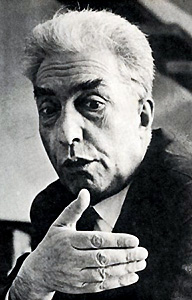
Left to right: Petrassi, Malipiero, Pizzetti, Dallapiccola.
Source: ASO Live CD (My rip)
Format: mp3(320), DDD Stereo
File Size: 217 MB (incl. cover)
Download Link (mp3) – https://mega.nz/#!eqA10SbQ!pjL4xb4-3LpXS0MZGva9hEcsaHG0p5mdLeAhJL561VQ
/>
Enjoy! Don’t share! Buy the original! Click on "Reputation" button if you downloaded this album! 🙂
Modern: Tonal
Alexander Mosolov’s (1900-1973) short, powerful Zavod (Irony Foundry), from the ballet Stal (Steel) of 1928, is an
exacting portrait of heavy industry against an emotional background of noble, socialist idealism. It is also an early example of
music made almost solely from the combining of patterns (eschewing traditional melody, harmony, and counterpoint) – triplet
figures in the lower strings and trumpets over a strident four-beat bass suggest the turning of flywheels and other mechanisms;
gradually added to this are high sliding figures like the sliding of steel against steel, loud metal-sheet crashes, orchestra anvil,
and high, single-beat stabs. A noble theme of primary intervals stated in the French horns emerges from this mix. Suddenly,
all the machines shut down and a new accumulation of patterns starts in the high winds accompanied by military rolls on the
snare drum. The theme is then restated in the low brass, followed by an unremitting, driving, machine-like coda.
Vladimir Vladimirovich Shcherbachov (1889-1952) was a Russian composer of the Soviet era. He studied with
Maximilian Steinberg, Anatoly Lyadov, and Jāzeps Vītols at the St. Petersburg Conservatory from 1908 to 1914. When his
Symphony No.2, "Blokovskya" received its premiere on December 14, 1927, more than a few music critics of Leningrad
admitted preferring it to young Shostakovich’s Second Symphony and other works of overtly Soviet Marxist political content.
It is as difficult to forge a link between his style and influences and such post-revolutionary artistic trends as futurism,
constructivism, proletarian music theater, Russian atonality, or Russian quarter-tone music, as it is to align his personal
belief system with Marxist-Leninism. During its composition, the composer had envisioned a two-evening cycle, in which
poetic themes introduced in solo songs on Alexander Blok’s texts would be brought to a symphonic apotheosis in a five-
movement work that incorporated another four poems. Even though the grand conception was abandoned, the completed
symphony is permeated with the romance element: in its pronounced lyrical tone, its scoring, its textures, and its decidedly
non-schematic form. Written after a sojourn in Italy, Blok’s “Canto of Hell” is a Russian Symbolist’s Inferno in miniature,
fusing pointed references to Dante with fin-de-si???cle decadence. Shcherbachov’s fifth-movement setting of it commences
with a Beethovenian instrumental fantasy developing previous themes, albeit arrayed with an inexhaustible stream of ever-
changing colorations.
In 1905, Nikolai Miaskovsky (1881–1950), who would become one of the most prolific and significant Russian
composers of the twentieth century, author of twenty-seven symphonies, was still in the military. He worked as a military
engineer, in spite of his growing passion for music. He played piano and violin, studied composition privately with Reinhold
Gli???re, met with and sought advice from the unquestionable leader of Russian music, Nikolai Rimsky-Korsakov. Silentium,
completed in 1909, was the first of Miaskovsky’s compositions to be publicly performed. It is one of the most sincere and
passionate of his pieces, remarkable in its combination of spontaneity, originality and well-thought technical mastery.
Its twenty-minute one-movement structure follows Poe’s tale very closely—a dark parable about the unbearable horror of
eternal silence, told through a symbolic figure of a man, tired and full of sorrow, longing to be alone. He sits on a gray
rock amidst a sad landscape of desolation, taking in stride terrifying noises and whispers, dangers of wild animals and
tremendous storms, but runs in horror when a sudden deadly silence falls, bestowed by demons.
Music by [see above]
Played by the American Symphony Orchestra
With Marina Poplavskaya (soprano) & Michael Wade Lee (tenor)
And the The Concert Chorale of New York
Conducted by Leon Botstein
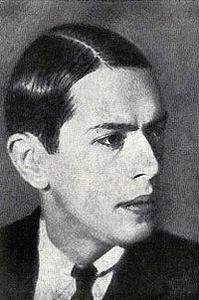


Left to right: Mosolov, Shcherbachov, Miaskovsky.
Source: ASO Live CD (My rip)
Format: mp3(320), DDD Stereo
File Size: 198 MB (incl. cover)
Download Link (mp3) – https://mega.nz/#!i3BDlSYa!iiqpMdd5vrszwc3XeEMB5E8DT0Pgju8uqWOJsbihVQ0
Enjoy! Don’t share! Buy the original! Click on "Reputation" button if you downloaded this album! 🙂
Modern: Tonal/Contemporary
The German composer Karl Amadeus Hartmann (1905-1963), famed as the visionary pioneering instigator of the Munich
???Musica Viva??? Concerts (1945-1963) identified himself as a creator of a Bekenntnismusik ("confessional music"), a music of an
ideological, political, social and spiritual commitment. The Symphonic Hymns (1942/43) is the second in a trilogy of
orchestral works entitled Sinfoniae Dramticae that bridge the years between the creation of the Sinfonia Tragica (1940/41)
and the Klagegesang (1944/45). Rather than adopting the three-movement slow-fast-slow pattern favored by Hartmann
in other works of this period, the three movements yield a sequence Fantasia (an Introduction with theme and variations),
Adagio, and Toccata (Allegro risoluto). Its ambiance, extended orchestra dimensions (nowhere else exceeded by this composer),
sectional and thematic clarity and lucidity, coupled with luxuriant instrumentation, all make the Symphonic Hymns one
of Hartmann???s most engaging "early" scores.
To a large degree, Hartmann’s Seventh Symphony may be regarded as a summation and synthesis of the various strands
in his musical language and style. The ???meditative depth and vital exuberance??? instanced by H???usler are both found here in a
highly developed form. In technical terms, moreover, the work brings to a new level of equilibrium the composer???s fruitful blend
of classical developmental techniques with baroque thematic and textural elements and with a profundity and intensity of expression
that have their roots in the complementary if widely contrasted emotional worlds of Bruckner and Mahler.
Hans-Werner Henze’s (1926-2012) Third Symphony is one of the most overtly programmatic of his symphonies;
the three movements are entitled "Invocation of Apollo," Dithyramb," and "Dance of Conjuration." This seems logical when one
considers that Henze began to compose for the ballet in this same period: in 1949 he composed the Ballet Variations for
large orchestra and the chamber ballet Jack Pudding. Although this was Henze’s first large-scale work after his switch
to serialism (or his interpretation of it), one can’t imagine a work less calculated to please the dogmatists at the premiere
at the Donaueschingen Festival: the movement titles, the jazzy rhythms and tenor saxophone melody, occasional "lapses"
into tonality, and the massive counterpoint in the second movement all seem to set the work apart. He thus began to mold
the "Darmstadt teachings" to fit his own voice early on, much as Berg had melded Schoenberg’s twelve-tone system with
tonal procedures to create a musical language more accessible to the general public.
Music by Karl Amadeus Hartmann & Hans Werner Henze
Played by the American Symphony Orchestra
Conducted by Leon Botstein
Source: ASO Live CD (My rip)
Format: mp3(320), DDD Stereo
File Size: 194 MB (incl. cover)
Download Link (mp3) – https://mega.nz/#!qvIy0AqR!4sQzNczh5H9j3kswAxTT9pfinP_erdm5R9hTt9L5hHM
Enjoy! Don’t share! Buy the original! Click on "Reputation" button if you downloaded this album! 🙂
Oh, that Cool Yule thing goes for all the other thread readers, too, y’all!
And yes, the artwork of all their albums is the same. 🙁
No.1399
Late Romantic/Light Music
The man and his music: all-new recordings of classic Percy Grainger (1882-1961) orchestral works, with a selection of
readings from his letters. Grainger’s letter-writing belongs to a time before texting, tweeting, twittering, blogging and other
forms of social networking reduced personal communication to utilitarian single sentences. Grainger’s letters reflect his passions –
for life, for music, for extreme physical experiences, for language itself. They are driven by introversion and by life circumstances
that saw him, as a traveling concert virtuoso, frequently separated from those he trusted and loved, alone in the company of
strangers. On this disc, especially selected letters written by Grainger are read by ABC Classic FM’s Damien Beaumont,
with excerpts of Grainger’s orchestral works performed by Adelaide Symphony Orchestra conducted by David Stanhope,
in between spoken word tracks.
Music Composed by Percy Grainger
Played by the Adelaide Symphony Orchestra
With Damien Beaumont (narrator)
Conducted by David Stanhope
"The complete package on offer here – booklet and CD – amounts to a readable and listenable encyclopedic entry on Grainger,
the man and his music. What’s more we get something like the ‘complete’ man. The many facets of his life and character are
addressed. The list is long: his insistence on Anglo-Saxon English, his ‘mother’s boy’ devotion, his muscular energy running
from concert to concert, his dazzling repute as a piano virtuoso and his staunch friendship with many musicians including Grieg
and Delius. Add to this his heightened sense of self-worth, his confident and unconventional sexuality – both in ideas and in
sado-masochist practice, his mania for towelling clothing and his dedication to recording things – his museum. All the most
famous musical pieces are there though we do not have extracts from the more challenging stuff such as the astonishingly
eruptive The Warriors and the weird harmonic experimental machine music of the 1940s onwards.
This is very much Damien Beaumont’s baby – his sequence and his concept. Beaumont is used to playing a narrative role.
He has been the orator in Strauss’s Enoch Arden and Britten’s Ovid Metamorphoses. He also took that role in two works by
Jessica Duchen’s Franz Liszt – Son of the Father and her Songs of Triumphant Love. I have previously had good cause to
praise Duchen’s Phaidon book on Korngold. I had not realized that she was a composer and would like to hear these two works.
Beaumont reads the shortish letter extracts with a sort of innocent wide-eyed clarity yet is quite natural and unstilted.
Readings alternate with music – complete works, all fairly brief. David Stanhope draws out and conveys from his orchestra
those great slow-surging and sentimental upwashes of warmth as well as a spirit of sheer jollity. Kay Dreyfus provides the
annotation. Her 1985 book of Grainger’s letters The Farthest North of Humanness is well worth looking out though brace
yourself.
Grainger stylishly presented in Grainger’s own words with his own music. There’s no better place to start but even seasoned
Grainger enthusiasts – those who already have the stunning Chandos Grainger Edition – will find much of value here."
Musicweb
Source: ABC Classics CD (My rip)
Format: mp3(320), DDD Stereo
File Size: 152 MB (incl. cover)
Download Link (mp3) – https://mega.nz/#!imBmRK7L!UWa4UsIVPi9Td7dwerq4Pt_8XNBQcAyyuIyzTVV3u20
Enjoy! Don’t share! Buy the original! Click on "Reputation" button if you downloaded this album! 🙂
Modern: Neo-Romantic/Light Music
A little Dr. Seuss for Christmas … 🙂
The Sneetches and Other Stories is a collection of stories by American author Dr. Seuss, published in 1953. It is composed of
four separate stories with themes of tolerance, diversity, and compromise: "The Sneetches", "The Zax", "Too Many Daves", and
"What Was I Scared Of?". Based on a 2007 online poll, the National Education Association named the book one of its "Teachers’
Top 100 Books for Children."
The Sneetches tells of a group of yellow bird-like creatures called the Sneetches, some of whom have a green star on
their bellies. At the beginning of the story, Sneetches with stars discriminate against and shun those without. An entrepreneur
named Sylvester McMonkey McBean (calling himself the Fix-It-Up Chappie) appears and offers the Sneetches without stars the
chance to get them with his Star-On machine, for three dollars. The treatment is instantly popular, but this upsets the original
star-bellied Sneetches, as they are in danger of losing their special status. McBean then tells them about his Star-Off machine,
costing ten dollars, and the Sneetches who originally had stars happily pay the money to have them removed in order to remain
special. However, McBean does not share the prejudices of the Sneetches, and allows the recently starred Sneetches through
this machine as well. Ultimately this escalates, with the Sneetches running from one machine to the next….
"…until neither the Plain nor the Star-Bellies knew
whether this one was that one… or that one was this one…
or which one was what one… or what one was who."
This continues until the Sneetches are penniless and McBean departs as a rich man, amused by their folly. Despite his
assertion that "you can’t teach a Sneetch", the Sneetches learn from this experience that neither plain-belly nor star-
belly Sneetches are superior, and they are able to get along and become friends.
The Sneetches was intended by Seuss as a satire of discrimination between races and cultures – a message
that seems all the more poignant in the age of Donald Trump. And, yes, the narrator is indeed "Q". 😉
Music Composed by Lorenzo Palomo
Words by Theodore Geisel
Played by The Oberlin Orchestra
with John de Lancie (narrator)
Conducted by Raphael Jim???nez
Source: Oberlin Music CD (My rip)
Format: mp3(320), DDD Stereo
File Size: 136 MB (incl. covers & booklet)
Download Link (mp3) – https://mega.nz/#!myQXWajI!OPjoXKaTTioRiukJaOD_kZgwnhiH9uZTwx7ILO3z528
Enjoy! Don’t share! Buy the original! Click on "Reputation" button if you downloaded this album! 🙂
Modern: Tonal
More Christmas-themed music … 🙂
Performances of carols both ancient and modern have become central to the celebration of Christmas. The choral music on this disc
includes Gustav Holst???s surprisingly neglected Christmas Day, as well as music by Kenneth Leighton, John Joubert,
William Mathias, John Gardner and John Rutter. The nostalgic mood of Herbert Howells???s evergreen carol-anthems
is echoed in Gerald Finzi???s In Terra Pax, which recalls the pealing of bells at midnight on a frosty Christmas Eve.
The City of London Choir, which enjoys an enviable reputation as a ???leader among nonprofessional choruses??? (The Times),
makes its Naxos d???but with this delightful recording.
Music by [see cover]
Played by the Bournemouth Symphony Orchestra
With the City of London Choir
And Julia Doyle (soprano) & Roderick Williams (baritone)
Conducted by Hilary Davan Wetton
Source: Naxos CD (My rip)
Format: mp3(320), DDD Stereo
File Size: 168 MB (incl. covers & booklet)
Download Link (mp3) – https://mega.nz/#!qmo3iAKL!0dSvpio_6RqoWXwZEXcm2T9iPDZD5IuXW9xf6BwLJW0
Enjoy! Don’t share! Buy the original! Click on "Reputation" button if you downloaded this album! 🙂
Late Romantic
Nikolai Rimsky-Korsakov (1844-1908) wrote his opera Christmas Eve during the period 1894-1895, and it was premiered
during the latter year. In 1903, he extracted this suite, which contains about a half-hour’s worth of music from the opera. What is confusing
to some listeners about the work is that it is often broken down in concert programs and on recordings into five, six, or as many as nine
sections, with translations of the individual numbers that can vary widely. The lovely music in the "Introduction," first heard on the horn,
sets the stage for the Romantic character of the score here. The lively and playful music from the "Games and Dances of the Stars" is
charming, as is the "Round Dance," which reprises the theme from the opening. The "Czardas" is joyous and, as so often with Rimsky-
Korsakov’s works, brilliantly and colorfully orchestrated. The "Devil’s Kolyada" is sinister, but ultimately its menace has an almost fairy
tale-like lightness. The Polonaise is graceful and stately and the "Procession to Midnight Mass" is absolutely lovely and quite memorable,
with the gently tolling bells deftly adding to the serene atmosphere at the quiet close. In the end, the music here is light and colorful,
not as exotic as Sh???h???razade or the Capriccio espagnol, but still with ethnic flavors and featuring Rimsky-Korsakov’s usual
brilliant scoring.
Music Composed by Nikolai Rimsky-Korsakov
Played by the Armenian Philharmonic Orchestra
Conducted by Loris Tjeknavorian
"This ASV release is the most attractive Rimsky-Korsakov disc to arrive for many a year, and very generous, too. We get plenty
of fine versions of Scheherazade, but the music included here is no less stimulating, and certainly no less inspired. Rimsky’s
orchestral palette is shown at its most dazzling and his supply of good tunes seems endless. Those who have seen Scottish
Opera’s splendid production of The Golden Cockerel or the more recent revival of the English National Opera’s Christmas Eve
at London’s Coliseum, will know about this melodic fecundity. They will also have discovered that many of the best ideas are
orchestral, and this seems likely to apply equally to The Tale of Tsar Saltan.
It is good to welcome back Loris Tjeknavorian to the recording studio, now conducting his own excellent Armenian Philharmonic
Orchestra. They have a first-rate principal trumpeter, whose fanfares at the opening of each movement of The Tale of Tsar Saltan
are very arresting, and who is equally characterful in the high muted call of the Golden Cockerel, who cries his bizarre warning
signal at the commencement of the opening picture of ”King Dodon in his palace”. He is later???in the wedding feast???to swoop
down on the grotesquely doddering monarch and peck him to death. The doting king had been hoping to marry the delectable
Queen Shemakha, portrayed by one of Rimsky’s most beguilingly sinuous melodies, which the orchestra plays very seductively
indeed. The diaphanous sound of the strings here is most delicate and quite lovely, and elsewhere Tjeknavorian makes the most
of the many piquant wind colours, often subtle, sometimes irridescent, always highly original and imaginative???the gleaming
horn chords, the chirruping flutes and piccolo, the reedy clarinet chromatics, the exquisite use of oboe timbre behind the strings,
the charming plinks from the harp and the dramatic thrusts from the brass. The weirdly sinister battle-field scene is most
evocatively handled (where the King’s sons, as little endowed with common sense as their royal father, manage to kill each other).
The third movement is very like Scheherazade, with another beguiling oriental melody and a glittering rhythmic dance for
woodwind and percussion before the luscious lyrical tune returns. There is plenty of splendour for the wedding celebration.
The Tsar Saltan Suite is no less vividly evocative. The first movement???one of Rimsky’s most spontaneous inspirations???is
wonderfully spirited and produces a joyous, carolling horn theme, while the second atmospherically catches the movement of
the waves on which the Tsarina is afloat in a barrel. The finale has striking rhythmic impetus and again shows how completely
the conductor and his band are at home in this music. The famous bumble-bee then buzzes in like a British Rail 125 express
on the home stretch to Paddington, and although here the ensemble might be a shade more precise, the effect is exhilarating
and the imagery delightful. (In the opera the bee is the Prince in disguise, getting his own back on his wicked aunts with his
nimble flight and ready sting.)
Perhaps most enchanting of all (if least substantial) is the music from Christmas Eve with its dances of stars and comets (opening
with atmospheric magic) and including the Devil’s droll and energetic Christmas celebration, a rhythmically strong Tchaikovskian
Polonaise (here instrumental, with flashing cymbals and bass drum, though with chorus in the opera) and the haunting finale
with tolling bell and processional chorale. This (like Tsar Saltan) is very much Ansermet territory, and Tjeknavorian shows a
comparable ear for the glowing wind colouring and fine textural balance, while the producer/balance engineer, Brian Culverhouse
provides an extremely vivid and cleanly detailed, if not sumptuous, soundpicture within the very apt ambience of the Aram
Khachaturian Hall in Yerevan, Armenia. The unison violins sound a bit thin when playing lyrically above the stave (it is difficult
to determine whether this is the actual orchestral timbre or a digital coloration), but in every other respect the recording
is in the demonstration class.
Alongside this excellence the inexpensive Naxos collection must be counted very much second-best. The Bratislava orchestra is
also a fine ensemble, and Donald Johanos finds plenty of picturesque detail for Rimsky’s charming orchestral effects (especially
the ”Dance of the birds” in the Snow Maiden). But the famous ”Dance of the tumblers” from the same work, though vigorous, is
a little short on unbuttoned zest, and in The Golden Cockerel, Queen Shemakha is lacking in allure???the shimmeringly sensuous
texture which is so striking on ASV is more routinely observed here. The Mlada Suite is well worth having, and its boisterous
”Cortege”, which ends the concert, has no lack of spirit. Overall the recording is bright and vivid, but though atmospheric it is
not opulent and does not convey a great deal of lustrous sentience."
Gramophone
Source: ASV CD (My rip)
Format: mp3(320), DDD Stereo
File Size: 192 MB (incl. cover)
Download Link (mp3) – https://mega.nz/#!z7glBaaa!weXCaLpu7KC1-Bs-EBJiaD3-RxhK716GWQtto3tZIXk
/>
Enjoy! Don’t share! Buy the original! Click on "Reputation" button if you downloaded this album! 🙂
Late Romantic/Modern: Tonal
The Symphony No.6 in E-flat minor, op.23 by Nikolai Miaskovsky was composed between 1921 and 1923. It is the largest
and most ambitious of his 27 symphonies, planned on a Mahlerian scale, and uses a chorus in the finale. It has been described as ‘probably
the most significant Russian symphony between Tchaikovsky’s Path???tique and the Fourth Symphony of Shostakovich’.
Miaskovsky in fact wrote part of the work in Klin, where Tchaikovsky wrote the Path???tique. The premiere took place at the
Bolshoi Theatre, Moscow on 4 May 1924, conducted by Nikolai Golovanov and was a notable success. Soviet commentators used
to describe the work as an attempt to portray the development and early struggles of the Soviet state, but it is now known that its
roots were more personal. The harsh, emphatically descending chordal theme with which the symphony begins apparently arose
in the composer’s mind at a mass rally in which he heard the Soviet Procurator Nikolai Krylenko conclude his speech with the call
"Death, death to the enemies of the revolution!" Miaskovsky had been affected by the deaths of his father, his close friend
Alexander Revidzev and his aunt Yelikonida Konstantinovna Miaskovskaya, and especially by seeing his aunt’s body in a bleak,
empty Petrograd flat during the winter of 1920. In 1919 the painter Lopatinsky, who had been living in Paris, sang Myaskovsky
some French Revolutionary songs which were still current among Parisian workers: these would find their way into the symphony’s
finale. He was also influenced by Les Aubes (The Dawns), a verse drama by the Belgian writer Emile Verhaeren, which
enacted the death of a revolutionary hero and his funeral.
The Symphony No.13 was composed in 1933. It is in one movement in three sections. Its central section contains
a fugato in B minor, and "peters out" with quiet B♭ minor dissonant chords. It is among Miaskovsky’s more dissonant
compositions and was only published in 1994 (!).
The Legend of the Invisible City of Kitezh and the Maiden Fevroniya is an opera by Nikolai Rimsky-Korsakov, and
is based on a combination of two Russian legends: that of St. Fevroniya of Murom, and the city of Kitezh, which became invisible
when attacked by the Tatars. Kitezh is arguably Rimsky-Korsakov’s finest opera, often being referred to as "the Russian
Parsifal;" however, it is not part of the standard operatic repertoire outside of Russia. As with several other of his operatic
operas, Rimsky-Korsakov later extracted an atmospheric, colorful orchestral suite from the score.
Music by Nikolai Miaskovsky & Nikolai Rimsky-Korsakov
Played by the American Symphony Orchestra
Conducted by Leon Botstein
Source: ASO Live CD (My rip)
Format: mp3(320), DDD Stereo
File Size: 244 MB (incl. cover)
Download Link (mp3) – https://mega.nz/#!SrQAzACQ!32pOGOkLEnJiTEKri7L4EHsQywsS6oEFeV5vChp-eU0
/>
Enjoy! Don’t share! Buy the original! Click on "Reputation" button if you downloaded this album! 🙂
———- Post added at 02:39 PM ———- Previous post was at 01:58 PM ———-
No.1404
Late Romantic
Alexander Zemlinsky (1871-1942) wrote to his publisher in September 1922, "This summer I’ve written something along the lines
of Das Lied von der Erde. I haven’t got a name for it yet. It consists of seven related songs for baritone, soprano, and orchestra to
be played without a break." After receiving the name Lyrische Symphonie, it was premiered under Zemlinsky in 1924 at the
German Theater in Prague, where Zemlinsky had been the music director since 1911. The work sets seven poems by Bengali writer
Rabindranath Tagore that record the course of a love affair from conception to fulfillment and dissolution. The harmonic language is
highly erotic, lushly decadent, and sometimes almost atonal. The melodies are extremely expressive and often intensely sensual.
The orchestration is richly oriental and exquisitely colorful. Although clearly a work after Das Lied von der Erde, Zemlinsky’s
Lyrische Symphonie is still an extremely affecting piece of post-fin de si???cle passionate, sexual pessimism.
The richly orchestrated and envisioned, sweepingly Romantic symphonic poem Die Seejungfrau (The Mermaid) is based on
Hans Christian Andersen’s fairy tale. "The Mermaid" received one performance on January 25, 1905, at a concert that also premiered
(Zemlinsky’s brother-in-law) Arnold Schoenberg’s well-known symphonic poem Pelleas und Melisande. The two composers are
reported to have had many conversations about the possibilities of uniting the aesthetics of so-called "pure music" (Brahms, Busoni,
Chopin, and others) with the narrative Romanticism of Wagner, Liszt, Berlioz, and others through the symphonic poem format.
Zemlinsky withdrew his composition from further performance, and it wasn’t until 1984 that the scores of the various movements
(separated in America and Vienna) were correctly identified and a full performance was again staged.
Zemlinsky does not provide a clear programme for the three movements, but musical analogues can generally be inferred by the
listener. The first movement’s tempo is "Sehr m???ssig bewegt" (Very moderate in movement) and opens with a depiction of the
depths of the sea bed alternating with the playfulness of the mermaid and other sea creatures. The initially playful theme is turned
into a furious sea storm, depicting the shipwreck (briefly interrupted by a lyrical theme of concern) and eventual rescue of the Prince.
The second movement, "Sehr bewegt, rauschend" (Much movement, thunderous), opens with a marvelous effect: a roll on a
suspended cymbal grows into a tremendous crescendo with the gradual accumulation of trilling winds and tremulous strings.
The longing of the Mermaid for the Prince is depicted in lyrical and playful lines. The Prince receives some hunting call-type
grandeur, but the main attention is paid to the Mermaid’s feelings.
The third movement is "Sehr gedehnt, mit schmerzvollem Ausdruck" (Very flexible, with sorrowful expression). The visit to the
Sea Witch seems to be depicted in the opening of this movement as one hears oddly chromatic passages in the high winds,
which alternate with the love theme given to a solo violin in the first movement. This is followed by the Prince’s wedding,
surrounded by great bursts of passionate, unresolved emotion (the overwhelming feelings of the Mermaid as she watches
this spectacle, rather than music for the wedding itself). This is some of the composer’s finest and most original writing
from his early period. The beginning music describing the depths of the sea is heard again, and gentle music describes
the Mermaid’s transformation into an eternal spirit of the air.
Music Composed by Alexander von Zemlinsky
Played by the American Symphony Orchestra
With Elizabeth Byrne (soprano) & John Hancock (baritone)
Conducted by Leon Botstein
Source: ASO Live CD (My rip)
Format: mp3(320), DDD Stereo
File Size: 217 MB (incl. cover)
Download Link (mp3) – https://mega.nz/#!rjIDCaRB!yIcn1C1fBuv3sIDfQ6lqMY7M4mERv42wMHSgGQbiQf8
Enjoy! Don’t share! Buy the original! Click on "Reputation" button if you downloaded this album! 🙂
Modern: Tonal
Among Andrzej Panufnik’s (1914-1991) symphonies, Sinfonia di Sfere (Symphony No.5) is the work which probably
best reflects the composer’s fascination with the principles of symmetry and geometry. In it, the composer for the first time used
a geometric figure as a kind of key determining the structure of the entire composition, from its formal shape to the smallest
structural details. The idea of spheres had a dual dimension for the composer: spiritual, as a kind of contemplative sequence of
thoughts and feelings, and formal, with a group of spheres having its visual equivalent in the composer’s diagram included in
the score; it became a structural skeleton for a very precisely organized musical material.
Mordecai Seter (1916-1994), was a Russian-born Israeli composer. In Paris, he studied composition at the Ecole
Normale de Musique with Paul Dukas and Nadia Boulanger. After his return to Israel, he pursued a musical language founded
on his own unique synthesis of the Stravinsky’s neo-classicism (which Boulanger adored) and other, European influences
fused with elements inspired by Middle Eastern Jewish musical traditions. He focused on choral works in particular.
Midnight Vigil (in Hebrew tikun hatzot) refers to an ancient custom. While living in the land of Israel, leaders of the people
used to gather in the middle of the night to study the Bible and engage in good deeds. Later on in the Diaspora, following the
destruction of the second Temple, the tikun had been practiced by persons of all social strata. It had become a service held at
midnight. The dramatic work consists of a Prologue and three scenes and concentrates on the spiritual experience of an
individual worshipper who sets a Midnight Vigil alone at a synagogue. While praying he sees visions which reflect his
innermost yearning for redemption.
With the close of World War II, the musical life of Poland experienced something of a renaissance, in which
Witold Lutoslawski (1913-1994) played a significant role. After marrying in 1946, however, he was forced to
spend much of his composing time creating "functional" music – music for theatre and film, children’s songs, and
arrangements of folk and popular tunes – to support his growing family. The influence on Lutoslawski’s Concerto
for Orchestra of B???la Bart???k’s Concerto of just a few years before is hard to ignore. The themes in both
works are folk-like and attractive, their settings employ some dissonance but are still accessible, and the manipulation
of the orchestra in both cases is highly virtuosic. There are other more specific similarities, too, like the arch-form
(a form Bart???k used often) of Lutoslawski’s first movement and the chorale theme of his third movement, which is
virtually a quotation of the chorale theme from the second movement of the Bart???k work. Written over a five year
span, the Concerto was premiered in 1954. Lutoslawski called the Concerto "the only serious piece"
among his folk music inspired works.
Lutoslawski’s Symphony No.3 of 1973 unfolds as one continuous movement, but a number of sections can
clearly be heard. The brass shout a call-to-arms to launch the symphony, but the music quickly dissolves into a
nebulous wash. The work proceeds in an episodic fashion, with the attention shifting abruptly from one texture to
another. The brass continue to interject, and at last an extended transition pushes toward a more substantial section.
Music by [see above]
Played by the American Symphony Orchestra
With The Concert Chorale of New York
Conducted by Leon Botstein

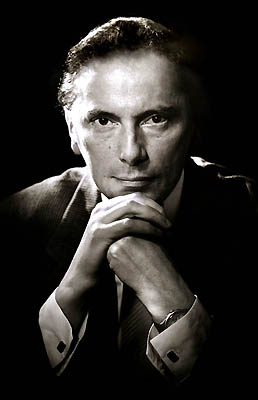
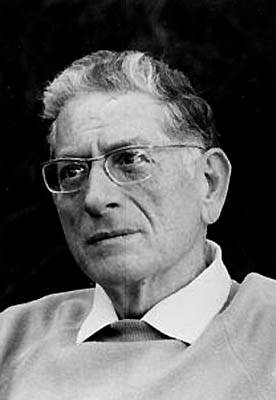
Left to right: Witold Lutoslawski, Andrzej Panufnik, Mordecai Seter.
Source: ASO Live CD (My rip)
Format: mp3(320), DDD Stereo
File Size: 236 MB (incl. cover)
Download Link (mp3) – https://mega.nz/#!3qBixQAK!XkiHwZSOmNMPpJq3ZA1mXXp9AH14IQaCYwmh0ugiFfA
Enjoy! Don’t share! Buy the original! Click on "Reputation" button if you downloaded this album! 🙂
———- Post added at 11:29 AM ———- Previous post was at 10:38 AM ———-
No.1406
Light Music
Bill Worland (1921-2011) was born in London and was trained as a classical musician, but soon after leaving school
started playing with light orchestras such as Cecil Barker’s band, a regular feature of the Summer Season at the Broadstairs
Pavilion throughout the 1950s and 60s, and the East Kent Light Orchestra (of which we know nothing – any information
would be gratefully received!). He moved to Kent in the 1960s, and composed many works for the BBC, but was aghast
when in 1967 they cut the whole Light Programme (the forerunner of Radio 2) and several individual programs focusing
on light music. He continued campaigning, together with the Light Music Society, on behalf of this genre’s many fans, and
now at last it seems to be back in favor. Bill also published a somewhat ‘controversial’ memoir, “Fumble Four Bars In”,
in 1997, but it is not generally available as it was produced by vanity publishers Minerva Press.
Music Composed by Bill Worland
Played by the City of Prague Philharmonic Orchestra
Conducted by Gavin Sutherland
"Bill Worland belongs to the old school of "British Light Music", of the variety that appeared, for instance, on Vernon
Handley’s disc for Classic FM, rather than the more musically ambitious offerings of composers such as Antony Hedges,
David Lyon, and even the current doyen of the genre, Philip Lane. So, it probably goes without saying, that this disc,
beautifully crafted as all its music is, will only appeal to a certain audience and maybe a narrower one than that which
currently laps up the output of, for example, the ASV White Line label (London Landmarks, Constant Lambert, Kenneth
Leighton et al).
Some of the pieces, even in the extended Broadstairs, Descriptive Suite, sound like ballroom music, others like film
soundtracks, although there are moments of greater depth and feeling. The composer’s own highly informative booklet
notes paint a vivid picture of the genesis of each piece and lend a poignancy to Intermezzo 45 which the music certainly
lives up to. Worland describes his R&R at the end of WWII, near Tel Aviv, following a time in the western desert. Even so,
the music is incredibly middle-of-the-road for most of its duration, the closing Finale – Michaela (Reprise) proving the
exception. Rhapsodie Tristesse could almost be subtitled Rachmaninov-lite (or Warsaw Concerto 1???, I suppose!).
The pieces I ultimately enjoyed most, alongside Intermezzo 45, were the closing two Americanisms. Honky-Tonk Town
was originally scored for banjo but as a jazz combo piece is also very winning, whereas Midnight in Manhattan is a
spacious blues-style composition.
I haven’t heard the equivalent Marco Polo Worland disc but, whilst acknowledging that this isn’t, in general, my
particular cup of tea, it is beautifully composed, lovingly recorded and may make someone more nostalgic than
myself for the times it evokes very happy indeed."
Musicweb
Source: Campion Cameo CD (My rip)
Format: mp3(320), DDD Stereo
File Size: 152 MB (incl. covers)
Download Link (mp3) – https://mega.nz/#!yzRAwIDL!gzA1E_4MxOu-ZVs-RFpGbA3ZJ_-x1fuScSxHHApnmmM
/>
Enjoy! Don’t share! Buy the original! Click on "Reputation" button if you downloaded this album! 🙂
———- Post added at 11:48 AM ———- Previous post was at 11:29 AM ———-
https://i.postimg.cc/BZzfYPZM/xmas.gif
Merry Xmas, everyone!
https://media1.tenor.com/images/0695ba6da23e53df750e439469e02084/tenor.gif?itemid=4828365
W
As a Christmas present to you and one and all, here is Marjan Mozetich’s 1997 Concerto for Violin and Strings, the ardent and tuneful ‘Affairs of the Heart’, one of my favourite modern concertos; and scandalously little known. In this (only?) recording it is played by Juliette Kang, violin with the CBC Vancouver Orchestra under Mario Bernardi, conductor. None of the other works I have heard by this composer have the same overwhelming emotional impact imho, although they are decent enough.
When CBC Radio broadcast the concert performance of Mozetich’s 1997 violin concerto, the Corporation’s switchboards lit up from coast to coast. There were numerous reports of what those who work in radio sometimes call “the driveway experience”: where listeners are so captivated by what they’re hearing, they remain in their cars, listening to the end, even though they’ve long since arrived home. The music of the concerto gives voice to emotions that are impossible to articulate in any other language: the inexplicable affairs of the heart.
MP3 320 54MB
https://mega.nz/#!2ARFgADR!Qv1JVLTj-jJrw5a6hNr_a6xYov0r5nVrkiuwk1Kg2Sg
No.1406
Modern: Tonal
Loris Tjeknavorian (*1937) has led a truly cosmopolitan career, both as a conductor and composer. Having lived in Iran,
the United States (Michigan and Minnesota), Britain, Austria, Armenia, and having led orchestras in those countries, as well as
in Israel, Japan and the former Soviet Union, he has absorbed a range of ethnic and cultural influences. This colorful background
shows up in his music: his church compositions show Armenian and Eastern Orthodox influences, while his stage and orchestral
works divulge Iranian, Persian, and Armenian flavors. Tjeknavorian (pronounced ‘Cheknavorian’ or ‘Cheknavarian’) has made
more than 60 recordings as a conductor and has composed over 70 compositions. After a brief residency in New York (1986-1988),
Tjeknavorian accepted the appointment of principal conductor and artistic director of the Armenian Philharmonic Orchestra in 1989.
He left this post in 2000 to focus on composition and freelance as a conductor.
Composed in 1983, Othello was commissioned by Robert de Warren (Artistic director of Northern Ballet Company in
Manchester, England) who also wrote the scenario. The full-length ballet is in two acts and the orchestral suite consists of ten
movements. In 1984 Northern Ballet toured the production throughout the major cities in the UK, including London, where
it was performed in the presence of Princess Anne. The ballet suite was recorded by the London Symphony Orchestra
(conducted by the composer) in 1984. The American premiere was given by Sarasota Ballet in Florida in 1997 (Directed
by Robert de Warren).
The epic and tragic story of the opera Rostam & Sohrab is taken from the Shahname, ‘The Book of Kings’, a Persian
literary classic written in the 10th century by the poet Ferdowsi. The opera itself took many years to complete, and
Tjeknavorian was provided with the encouragement and financial help of the late Carl Orff, composer of the famous
Carmina Burana, to complete his composition in Salzburg, Austria. The opera tells the story of the young hero Sohrab,
who seeks to find his father, the famous Persian warrior Rostam, whom he has never seen before. Father and son meet
on the battle field, and unaware of each others identity, Rostam kills his own son after a tremendous fight. As Sohrab
dies, both come to realize the truth. With a fittingly epic and vibrantly orchestrated symphonic sound, the score is inspired
by traditional forms of Iranian music, such as the dastgahs (the melodic modes of classical Persian music) and the melodies
and rhythms of the Zourkhane (the ancient ritual sport of wrestling), as well as other forms of Iranian religious music.
In 1983 Tjeknavorian extracted this seven-movement suite from his opera.
Music Composed and Conducted by Loris Tjeknavorian
Played by the London Symphony & Armenian Philharmonic Orchestras
Source: Loris Tjeknavorian CD (My rip)
Format: mp3(320), DDD Stereo
File Size: 180 MB (incl. cover)
Download Link (mp3) – https://mega.nz/#!7mJEDaDA!1FE8gY5yVEYGEdSRJqSJahfbW0BET0gTl7SzBy8eUUc
Enjoy! Don’t share! Buy the original! Click on "Reputation" button if you downloaded this album! 🙂
Late Romantic
Albert Rudolph F???sy (1837-1891) was born in Zurich, the son of the owner of a department store and city councillor.
He had his first musical training with Franz Abt and Alexander M???ller, the latter a friend of Richard Wagner, and in 1856 was
admitted to the Leipzig Conservatory, three years later moving to Vienna. For further study he also travelled to Dresden
in 1860, returning there again in 1868, after a period in Zurich. Since Zurich had been Wagner’s first home in Switzerland
between 1849 and 1858 and since a printed score of Wagner’s Tannh???user with the composer’s own corrections was found
in Faesy’s library, it is almost certain that Faesy must have known Wagner personally, but Wagner’s own writings and
letters do not reveal anything about this Swiss composer, 24 years his junior.
While not a master of melodic invention, Faesy reveals himself as skilled in instrumentation, harmony and counterpoint,
and a gifted creator of dramatic atmosphere. In orchestration he shows a preference for well-constructed and varied tutti
sections, rather than harmonizations of solo melodies with a conventional accompaniment. Special instrumental effects occur
briefly and only if strictly necessary. Writing for single instruments, whether separately or within the same group, is expertly
carried out, in perfect balance with the whole ensemble, producing either a full orchestral sound in which woodwinds and
brass predominate, or suggesting an almost indefinable, blurred atmosphere of mystery or tension through effective string
figuration. Faesy’s orchestral pieces may be imagined as conceived to accompany solemnly staged dramatic or edifying
tableaux vivants. The fact that the melodic construction of these monumental tone-poems is rather simple may justify
the intention to give them a monolithic aspect. The use of Wagnerian leitmotif is also quite different, employed not to
build up dynamic musico-dramatic action, but to be clearly heard and understood, and finally to involve the listener in
the whole musical event, from beginning to end. These works may be subdivided into various sections, but the few
intermediary pauses appear no more than little crevices in a solitary rock. In most cases, Faesy’s short leitmotifs,
which are used as musical cells, not as melodies, build up the whole musical material of a piece; variations or,
rather, transformations occur to constitute the theme or the accompanying musical material of a following section.
Music Composed by Albert Rudolph F???sy
Played by the Moscow Symphony Orchestra
Conducted by Adriano Baumann
"The G???tz von Berlichingen prelude is a powerful C Major march, which involves interesting woodwind, and
brass material but is loose in its construction. Similar and in the same key as Die Meistersinger, F???sy’s
harmonisation and orchestration is more complicated than Wagner’s: he jumps wildly from one idea to another.
Der Triumph der Liebe is based on Schiller’s hymn-poem where in the first part a tempestuous turmoil of nature
ruled by mythological beings is described. There is a menacing gait and gothic feel to the opening, which
characterises sinister foreboding, which could have come out of the pages of Rheingold. In the second part
human beings are inspired by the loveliness of nature to enjoy love and become godlike with bright march-
like chords over rippling strings. This, in parts, impressive tone poem for large orchestra is handled well by Adriano.
Sempach is based on a battle where the Swiss defeated the Hapsburgs. The tone poem describes the preparation
for war, the departure of troops with consecration of the banners by priests, then the oath and prayer and finally
the marching off. It is a dark work with chromatic yearnings, solemn bell toll, and prolonged and unproductive
modulations, then marching timpani and fanfare leading to a crescendo and patriotic conclusion. The bells at
the end are sadly out of tune with the orchestra.
The most prestigious of F???sy’s works is Columbus, an elaborate symphonic poem, but why of all heroes,
Columbus, when Switzerland is surrounded by land, and not water? Divided into six sections that run into
each other it tells of chapters in an invented episode in Columbus’s life:
The opening Hail thee, Columbus starts with majestic chords, then dissonance, and opens out into a charming
oboe-led lyrical theme which is soon interrupted by a crude and robust naval Sailor’s tune, but its development
is poor and somewhat circus-like. (The brass section has some trouble here.) This runs into Columbus at the Helm
where we pick up the opening themes again. Here we have a good picture of a clear horizon with calm sea lapping
at the boat. (Try tk 6 as the construction of this movement is much superior to the former and shows F???sy’s skills.
Bernstein’s West Side Story comes to mind.) The tuneless bells do little to complement the orchestral flow of
thematic material. The Vision is a represented by lightly scored variations on the earlier material where a harp is
introduced for the first time. Here the peaceful elegance of passages from Parsifal can be clearly felt. The Revolt
(mutiny?) with staccato bassoon is rather comic-like which I’m sure is not intended. A fugue-like return to the
opening theme of the first section works reasonably well but there is no fearful fight of any dramatic proportions
to listen to. The Decision is a section that closes the piece with a bright introduction before our majestic Columbus
theme, carried by the horns and other brass, returns. The finale revisits the brighter themes of the piece."
Musicweb

No photo or painted portrait of the composer seems to exist.
Source: Marco Polo CD (My rip)
Format: mp3(320), DDD Stereo
File Size: 142 MB (incl. covers & booklet)
Download Link (mp3) – https://mega.nz/#!jnIXhSia!0grWxsUOhargQO-63HN4FOVe1jcaqLYLFCP-b3f1Lcs
/>
Enjoy! Don’t share! Buy the original! Click on "Reputation" button if you downloaded this album! 🙂
Late Romantic
???mile Jaques-Dalcroze (1865-1950) was born ???mile Henri Jaques in Vienna. His mother, Julie Jaques, was a music teacher,
so he was in contact with music since his childhood. Naturally, by influence of his mother, Dalcroze formally begun his musical studies
still in his early years. When he was 10 years old, his family moved to Geneva, Switzerland, and in 1877 Dalcroze joined the
Conservatoire de Musique. He also studied at the College of Geneva, which he did not appreciate. Dalcroze considered the College
as a "prison" where education was basically rules, which were not concerned about the students’ interests. He wrote in almost every
musical genre except for religious music. His style and his artistic approach are distinguished above all by his extraordinary melodic
gift and the originality of his sense of rhythm. Aesthetically close to the French school (of which he was a fervent champion),
he nevertheless showed the influence of Germanic post-romanticism.
Music Composed by ???mile Jaques-Dalcroze
Played by the Moscow Symphony Orchestra
Conducted by Adriano Baumann
"The opera Janie is quarried for two orchestral bon-bons. The Prelude rustles and bustles with village chivalry and
rustic romance. There are horn fanfares as well as serene moonlit scenes for the woodwind. The music seems a
cross between the countryside visions of Bruckner and the Tchaikovsky of the orchestral suites; very agreeable.
The opera’s Danse Villageoise, in its brilliance and rhythmic life, owes its magnificence to Massenet’s Le Cid and
looks to a future that includes de Falla’s Tricorne.
After too short a pause comes 1914 – Impressions Tragiques. The composer had established his own Institute in
Hellerau in Germany. This was the base for promoting his linked theories of rhythm, physical movement and music.
It became a cultural centre until 1914 when the start of the war prevented the composer returning from a visit to
Geneva. This was a traumatic event and a reflection of the shock and violence of the times can be heard in the music.
Querulous wind-writing carries the implication of a fearful awe. The prominence of the brass and drums marks out
this piece as one shot through with wartime tragedy. If you know Tchaikovsky???s tone poem Hamlet you will have
some impression of this score’s darker moods. A Faur???-like serenity provides balm during the extremely impressive
last four minutes with solo flute, golden horn solos and a tender choral invocation to peace. The work was premiered
in Geneva in 1916 and given at the Henry Wood Proms in London in 1918 when consolatory balm was so much in
need. It is intriguing that Jaques-Dalcroze was writing music of this mood in 1914 when most of the compositions
of the time shunned the bleaker moods and continued the romantic-pastoral dream. The composer???s own introduction
for the piece starts: ???A storm overwhelms the world: humanity is swept irresistibly towards death …???
We are told that Tableaux Romands is Jaques-Dalcroze???s largest and most advanced symphonic work although the
destruction of many of his manuscripts during the bombing of Germany in the 1940s makes it difficult to gain a full
perspective. The Tableaux are drawn from the music he wrote for the 1903 centenary of the Vaud canton joining
the Helvetic Confederation. This was a massive enterprise and from the many hours of music he wrote he mined
both the Tableaux and the Suite de Ballet. There are five tableaux – each a free rhapsodic picture: L???Alpe; Un clocher …
au loin; Travail; Le Lac; Kermesse. The music of L???Alpe is vividly allusive, with Parsifal-like shimmering strings.
Horn-calls echo from Alp to Alp. These are countryside images, romantically idealised vistas and if the distant bells
and ardent viola solo in Un clocher … au loin lack the psychological grip of Vaughan Williams’ Bredon-heard bells
this is still a lovely piece and without any trace of Ket???lbey-kitsch. The playing and concentration of all involved
is deeply impressive. Travail is as dogged and serious as the title suggests with the occasional remission (4.10)
from labours. Le Lac, after a shivering start, projects an idyllic peace over a barcarolle-like line. The serenading
strings sing out with ardent Brucknerian confidence yet so sweet that the listener may also think of Leh???r and
Mahler. So we come to the final Kermesse. This is chuckling, bright-eyed and eager. Overall the Tableaux are
suave, extremely accomplished, romantic certainly, and Brucknerian in a pictorial way – listen to the last two
minutes of Travail. I wonder if Strauss heard this piece before writing his Alpine Symphony in 1913."
Musicweb
Source: Sterling Records CD (My rip)
Format: mp3(320), DDD Stereo
File Size: 192 MB (incl. covers & booklet)
Download Link (mp3) – https://mega.nz/#!q3h0xCYJ!KTasi-U9HVus3Mwgq_nq3kTAWTqUj-nS89GkMkOc_7E
/>
Enjoy! Don’t share! Buy the original! Click on "Reputation" button if you downloaded this album! 🙂
Modern: Neo-Romantic
Richard Yardumian (1917-1985) was an Armenian-American classical music composer, the youngest of ten
children to Armenian immigrant parents. He began a formal study of piano, harmony, theory and counterpoint at
age 21. He was only 19 when he wrote his most popular piece, the Armenian Suite. In 1945, Eugene Ormandy
and the Philadelphia Orchestra premiered Desolate City, which marked the first professional public performance
of one of Yardumian’s works. Throughout the history of their relationship, the Philadelphia Orchestra premiered ten
of Yardumian’s works, bringing the total of known performances worldwide to nearly 100.
The Armenian Suite,written in 1937 (the seventh and final movement was added in 1954 at the behest of
Ormandy, is everything the title seems to imply: folksy. It develops folk themes sung by Yardumian???s parents,
who immigrated from Armenia in 1906 to escape religious persecution. The Second Symphony (with alto voice)
was written over a time span of 17 years, the first movement in 1947 and conceived as a self-contained "Psalm" and
the second movement added in 1964, again at the behest of Ormandy. The style is reminiscent of Ernest Bloch’s.
Music Composed by Richard Yardumian
Played by the Utah Symphony Orchestra
With Lili Chookasian (contralto)
Conducted by Varujan Kojian
"In the seven movement suite we have a counterpart to Borodin’s Polovtsian Dances. The movements are postage
stamp sized – the largest (and last) being the 4 minute finale. In this Suite the composer encompasses the ceremonial
(the carolling brass choirs on tracks 1 and 7 passingly recall Hovhaness), the lone piper in the wilderness (Song and
Finale), a lullaby that works in Faur???-like magic, cheeky, bold, tinselly and eager round dances (Dance I and II) and
an Interlude that might just have escaped from Barber’s Adagio.
By contrast the symphony is, as anticipated, a more complex effort. The colour and drama persists but the musical
paragraphs are longer. The work has a dislocated history with the second of the two movements written more than a
decade after the first. The first was premiered in the 1950s and existed as Psalm 130 for tenor and orchestra (Vittorio
Giannini wrote a major piece for cello and orchestra inspired by this psalm) and then had added to it a substantial
movement lasting more than twice as long as the first. Contrary to the impression given by Mary Kinder Loiselle’s
otherwise helpfully full notes, the two movements are reasonably in style with each other with little easily
perceptible difference in idiom.
The Symphony is, in effect, a richly orchestrated song-cycle taking the sinewy warmth of Ernest Bloch’s writing
and adding to it a melodic memorability for which Bloch often struggled. The recording leans into clamminess but
is very good in the turbulent Biblical climaxes. Hanson and Vaughan Williams might be cited as stylistic ‘doubles’
with, this time, little, if any, of the brand of exotic mysticism you find in Hovhaness."
Musicweb
Source: Phoenix Records CD (My rip)
Format: mp3(320), DDD Stereo
File Size: 96 MB (incl. covers)
Download Link (mp3) – https://mega.nz/#!HmhgAaCC!DoZcgl9s5hEeRe1vzYC9b2IYJ2ziT7-icXsm8l__huU
/>
Enjoy! Don’t share! Buy the original! Click on "Reputation" button if you downloaded this album! 🙂
Modern: Tonal/Contemporary
"Continuum" features the modern orchestral works of Stephen "Lucky" Mosko, Tim Sullivan, Dan Crozier,
and Michael G. Cunningham. From Mosko is the premier recording of Transliminal Music, one of only
three of the composer’s orchestral works. From Sullivan is Polychrome, a piece based in instrumental colors
that finds the perfect balance between experimentalism and accessibility. From Crozier is Fairy Tale, an "opera
scene without words" that explores the narrative power of music. From Cunningham is TransActions, which is
driven by actions, gestures, and lines on one orchestra level bringing about reactions on other levels.
Music by [see above]
Played by the Moravian & Russian Philharmonic & Slovak Radio Orchestras
And by The Seattle Symphony
Conducted by Kirk Trevor, Vit Micka, Gerard Schwarz & Ovidiu Marinescu
"Mosko studied with Donald Martino, Mel Powell, and Morton Subotnick, which might give you an inkling
as to his style, which is knotty, dissonant, typically post-serialist but informed by a quest for unusual
instrumental combinations and textures. Transliminal Music (1992) starts off with angry declamations
for the full orchestra but passes through quieter, more ruminative passages where individual instrumental
choirs get their time in the limelight. There’s a lot of percussion and lots of percussive writing in this big piece.
At the other end of the spectrum is Michael Cunningham’s compact (just shy of eight minutes) TransActions (1980),
a nervous piece with a number of skittery scalewise passages from which a solo violin emerges on occasion,
perhaps giving voice to one of the unspecified transactions that take place in the course of the work. Whatever
those transactions are, they don’t seem to bring peace or respite to the participants. There’s a sense of latter-
day Expressionist angst to Cunningham’s piece.
More traditional sounding is Daniel Crozier’s Fairy Tale, which does have the lineaments of a tone poem even
if the tale it tells is not spelled out. In sound it recalls musical tale tellers of Eastern Europe, such as Novak,
Suk, and Janacek—there’s an exotic, quasi-Oriental feeling to its ripe, flowing, chromatic language. It’s the
piece that’s easiest on the ear and the most immediately appealing, providing a sharp contrast to Mosko’s
tough postmodernism.
Tim Sullivan might object, but I find his Polychrome (2008) for large orchestra reminiscent of Messiaen in its
ecstatic bursts of orchestral color, with a big emphasis on tuned percussion, including piano and harp used
percussively. Polychrome is an appropriate name for this highly colored prismatic composition, which may
be my favorite on the disc.
Despite the different personnel involved, all the performances are committed and highly competent, even
if the Moravian Philharmonic seems somewhat stressed at points. But then this is all pretty demanding stuff."
The Audiophile Audition
Source: Navona Records CD (My rip)
Format: mp3(320), DDD Stereo
File Size: 145 MB (incl. covers & booklet)
Download Link (mp3) – https://mega.nz/#!C6hjUSJb!1zw1NVGkfVM_ggILKq_5Q7UPSGXd3m289KVgFsUluWM
Enjoy! Don’t share! Buy the original! Click on "Reputation" button if you downloaded this album! 🙂
Modern: Tonal
Mikis Theodorakis (*1925) was born on the Greek island of Chios, which lies just off the Aegean shoreline of Turkey,
in 1925. Politics and the often-violent history of Greece in the twentieth century — and the composer’s efforts to transcend
them – form an inescapable backdrop to discussion of any of his works. He fought of the Communist side of the anti-German
Resistance and the subsequent Civil War was imprisoned for five years. A student of Olivier Messiaen, he began a career as
a classical, mostly symphonic composer while also emerging as a major Socialist figure.
A commission from M. Ernani, the director of the Festival of Verona (Italy) gave Theodorakis an opportunity to reconcile the
two sides of his career. The proposal was for a ballet based on the Zorba film and the book. The concerns of the ballet’s
story are broader than that of the film. Theodorakis, in notes to the ballet, expressed some dissatisfaction with the idea that a
man who mostly does nothing but dance and drink is a source of wisdom. The element of the story he stressed in the ballet
libretto was more in accord with the lifelong theme of his political and musical work: It is directed toward portraying the
horrible effects of long-standing blood feuds.
The creation of Carnaval was influenced by the Greek civil war. In August 1947 Theodorakis wrote the first sketches
on the island of Ikaria, a place of exile to which he had been deported shortly after the beginning of the civil war. From
fellow prisoners he heard the folk song Captain Andreas Zeppos, the melody of which was used in the first part of "Carnaval".
The final version of the ballet composition commissioned by the Opera of Rome was completed in 1953.
Music Composed by Mikis Theodorakis
Played by the Orchestre Symphonique de Montr???al
And The Philharmonia Orchestra
With the Choeur Symphonique de Montr???al
Conducted by Charles Dutoit
"Mikis Theodorakis??? Zorbas Ballet will be recognizable to those familiar with his film score for Zorba the Greek,
probably his most famous work outside of his popular songs. Zorbas Ballet, which came after the film, utilizes
much of the same thematic material, heard here in the eight selections comprising Part Two of the ballet suite.
This is highly energized, highly rhythmic music, rich in melodic content built on modal harmonies???which is not
surprising, as Theodorakis drew heavily upon folk materials of his native Greece. This results in a vibrancy and
immediacy that has you almost visualizing the dancers before you.
Theodorakis??? highly politicized nature seems to find voice in the vocal selections (featuring characterful singing
by soprano Ioanna Forti and the Montr???al Symphony Chorus), which occasionally sound a good deal like Prokofiev???s
Alexander Nevsky. Charles Dutoit and the Montr???al Symphony provide an electric and enchanting account,
enhanced by some virtuoso solo playing.
The disc actually begins in a less festive air with the serenely exotic Adagio for solo flute, string orchestra, and
percussion. Kenneth Smith offers a probing rendition supported by Dutoit and the Philharmonia Orchestra."
Classics Today
Source: Decca CD (My rip)
Format: mp3(320), DDD Stereo
File Size: 120 MB (incl. covers)
Download Link (mp3) – https://mega.nz/#!q7AxHApA!damixvj2Tk641DMczlA1qULsT4XkIKxkDCOknHjymu4
Enjoy! Don’t share! Buy the original! Click on "Reputation" button if you downloaded this album! 🙂
Modern: Tonal
Yasushi Akutagawa (1925-1989) was a Japanese composer and conductor. Akutagawa studied composition
with Kunihiko Hashimoto, Kan’ichi Shimofusa and Akira Ifukube at the Tokyo Music School. He was one of the members
of Sannin no kai (The Three) along with Ikuma Dan and Toshiro Mayuzumi. His compositions were influenced by
Stravinsky, Shostakovich, Prokofiev and Ifukube.
Now, the first of the two suites presented here might be a little tough to take: It’s a suite derived from
Akutagawa’s opera L’Orph???e de Hiroshima, which involves some singing – in Japanese. Truth be told,
the Japanese don’t give one fucking rats’ ass whether us Westerners are interested in their music – or not.
They just don’t care. That’s why Japanese CDs of film scores never have English liner notes. They just don’t give a shit.
Or, it might be some sort of inferiority complex.
La Princesse de la Lune is a ballet suite, for orchestra alone. This is what you should focus on,
and it’s very much in the style of Akutagawa’s film music. The music is extremely colorful and meticulously
crafted, like all of his scores. Fun fact: We do care, even if they don’t care that we care.
Music Composed by Yasushi Akutagawa
Played by the Orchestra Nipponica
Conducted by Tetsuji Honna
Source: Exton CD (My rip)
Format: mp3(320), DDD Stereo
File Size: 183 MB (incl. covers)
Download Link (mp3) – https://mega.nz/#!rmQhkSRK!VR1Dn08Ts1MHuK2ahctDigdVK12lcNjaR6F_9fTTncs
Enjoy! Don’t share! Buy the original! Click on "Reputation" button if you downloaded this album! 🙂
Btw: Akutagawa has a wrong link.
Happy New Year
Late Romantic
At the time these recordings were originally made, the music of Hugo Alfv???n (1872-1960) – apart from his popular and ubiquitous
Swedish Rhapsody No.1 was almost unknown outside his native Sweden; the Gramophone catalogue for 1979 lists only the
brief "Elegy" from the incidental music to King Gustav Adolf II as available on disc apart from a couple of issues of the rhapsody.
But his film music remains relatively neglected; the current listings only show one other recording of the two scores here, a
Naxos release from 2007. It is also perhaps unfortunate that the CD cover describes the music simply as ‘Orchestral Suites’ when
the title ‘Film Music’ would have given a better idea of its contents, and would possibly have attracted a wider field of potential
purchasers.
Music Composed by Hugo Alfv???n
Played by the Helsingborg & Norrk???ping Symphony Orchestras
Conducted by Hans-Peter Frank & Harry Damgaard
Source: Sterling Records CD (My rip)
Format: mp3(320), ADD Stereo
File Size: 116 MB (incl. covers & booklet)
Download Link (mp3) – https://mega.nz/#!fmwjwApD!H1POGoI6pFGF19rOTxv5JR97mbr0kUZl9AWg0iViXBQ
Enjoy! Don’t share! Buy the original! Click on "Reputation" button if you downloaded this album! 🙂
———- Post added at 12:47 PM ———- Previous post was at 12:04 PM ———-
No.1414
Late Romantic
Ole Olsen (1850-1927) was a Norwegian organist, composer, conductor and military musician.
From a young age Olsen learnt to play the piano and the violin. At the age of five he composed his first
small piece, and by the age of seven he sometimes stood in for his father playing the church pipe organ.
In 1865 Olsen went to Trondheim as apprentice to a craftsman. He also studied composition and the organ
from Fredrick and Just Lindeman. In 1870, having given up his apprenticeship, he moved to Leipzig where
he studied under Oscar Paul at the music conservatory until 1874. There he wrote his Symphony in G.
Olsen’s works were influenced by Richard Wagner. Another strong influence was the traditional Joik form of song,
as he was involved in collecting folk tunes while in the military. These influenced the large number of military
marches he composed, and the nationalist tradition was also represented in his stage works.
At the age of 29, in 1879 Olsen went on his first international tour, conducting his music in Leipzig, Cologne
and Paris. The main work on this tour was Op.10 Asgaardsreien (The Ride of Asgaard) which was wery well
received. This encuraged him to extend his travelling for another two years touring Wienna and during this time
made useful contacts with Liszt, Brahms and Goldmark.
Music Composed by Ole Olsen
Played by the Latvian National Symphony Orchestra
Conducted by Terje Mikkelsen
"Asgaardsreien (The Ride of Asgaard) is like an apocalyptic Rouet d’Omphale or a ramblingly varied Ride of the Valkyries.
The wild-eyed facade slips once or twice, making room for the sort of cool pastoral associated with Grieg’s Holberg.
Olsen’s sole Symphony has a first movement in the form of an affably bustling Allegro maestoso; think in terms of
Beethoven’s Pastoral. An amiably fly-away Allegro makes way for a sentimental Andante with a melody that moves
between anthem and what sounds at first like middle-eastern exotic of the sort embraced in Godard’s symphonies.
Unusually the finale is another Andante, here marked ‘quasi adagio’, but with Allegro episodes and a final bacchanal.
This is a good-natured symphony which would keep suitable company alongside the symphonies of M???hul. Bizet and
early Saint-Sa???ns. The Suite for string orchestra owes its substance to the composer’s 1890 incidental music for
Johan Nordahl Brun Rolfsen’s comedy Svein Ur???d. There are seven movements which include a pensive moonlit Song,
a delicate Sibelian Northern Lights and Ice Field, Spring and Dream (both Grieg-like), a skittering and vigorous
Among the Gypsies, a Gynt-inflected country-dance in Dwarves and Elves and a final smiling Sunset. In the fifty
opus numbers and twelve years that separate the Suite from the other two works Olsen clearly gained plangent
depth and individuality.
Mikkelsen and his Latvian orchestra seem confident and well up the tasks sets by Olsen. The programme is recorded
in a warm space, delivering an open sound that caresses the ear. As for the fulsome liner-notes they are by Audun
Jonassen. They are given in English and Swedish. It’s a shame to have to choose but two things swing in favour of
the Sterling: the capacious and warm acoustic and the often striking Suite."
Musicweb
Source: Sterling Records CD (My rip)
Format: mp3(320), DDD Stereo
File Size: 163 MB (incl. covers)
Download Link (mp3) – https://mega.nz/#!2mRE1ADK!3HH0HVdkZ-iIx7WhVl-LCaBBTKx1kuojNyMYkGmyru0
/>
Enjoy! Don’t share! Buy the original! Click on "Reputation" button if you downloaded this album! 🙂
Modern: Tonal
Edvard Fliflet Br???in (1924-1976) was a Norwegian composer and conductor. Br???in studied
at the institution Musikkonservatoriet i Oslo from 1942 to 1945, and musical composition with
Bjarne Brustad and conducting with Odd Gr???ner-Hegge. He wrote symphonies, compositions for
piano and orchestra, for flute and orchestra, chamber music and operas.
His First Symphony was premiered in 1950 by the Oslo Philharmonics. It is a work where inspiration
of post-war patriotism fuses with a tradition-orientated international style. Around the same time Br???in received
a study grant enabling him to go to Paris for studies with Jean Rivier. After returning to Norway Br???in turned to
composing full-time, and his Second Symphony is clearly influenced, certainly in way of neoclassical formal
clarity, by what he had learned and heard during his studies in Paris. Whereas the second symphony was written before
a wave of modernism washed over Norway, the Third Symphony came into being after hard-core modernism
had been usurped by postmodernist ideas. Here the traditional multi-movement form has been replaced by a dramatic
narrative in which the various "scenes" change within the context of the single movement.
Music Composed by Edvard Fliflet Br???in
Played by the Norwegian Radio Orchestra
Conducted by Peter Szilvay
"This is an essential acquisition for collectors of Scandinavian symphonies. Norwegian composer Edvard Fliflet Br???in
was born in Kristiansund and in 1942 moved to Oslo, studying at the Music Conservatory and graduating as an organist.
Odde Gr???ner-Hegge was his conducting teacher and Bjarne Brustad for composition. His claim to some prominence rests
on his opera Anne Pedersdotter (1971).
He wrote three symphonies and they are handily gathered on this disc. The First was premiered by the Oslo Phil conducted
by Gr???nner-Hegge. It’s a fascinating yet gawky fusion-collision of Grieg’s cool pastoralism (a lovely lyrical presence at 6:42),
ursine Beethovenian dance from the Seventh Symphony and the knockabout skirl of the last two movements of Shostakovich 6.
The Second was written after study in Paris with Jean Rivier (1950-51) on his return to Oslo. There are fewer rough edges in
this work, a greater refinement and a predominantly cooler emotional temperature. Again the Oslo Phil presented the work’s
premiere over the radio in February 1955 when they were conducted by ???ivind Fjeldstad. Composer-critics Finn Mortensen and
Klaus Egge noted similarities with the Shostakovich symphonies something which I more readily associate with the
First Symphony. The folk voice is certainly there though and remains a clear presence in the Third Symphony which was
completed in 1968 and premiered once again by the Oslo Phil in 1969. This is a clamorous work recalling in its turmoil
Milhaud’s Eighth but again mixed with brutal infusions from Shostakovich. It ends once again with a Beethovenian exultation
this time of a type familiar from the Egmont overture."
Musicweb
Source: Simax Classics CD (My rip)
Format: mp3(320), DDD Stereo
File Size: 187 MB (incl. cover)
Download Link (mp3) – https://mega.nz/#!vrBTQaJT!hhqGlNQoRRkojz5sIUnezZgAu9qJQeSUq4zG-_FeI1Y
/>
Enjoy! Don’t share! Buy the original! Click on "Reputation" button if you downloaded this album! 🙂
Modern: Tonal/Contemporary
Themes & Variations is an intriguing album that includes three sets of variations
by a range of British composers from William Walton to Alexander Goehr
First up are the Variations on an Elizabethan Theme, composed for the 1953 Aldeburgh Festival, is a set of seven variations on
the 16th-century "Sellinger’s Round", scored for string orchestra. Its plaintive melody – arranged by Imogen Holst, friend and
supporter of the Festival’s founder Benjamin Britten – is followed by variations by Arthur Oldham (a student of Britten’s)
and Humphrey Searle (among whose compositions are scores for the 1963 horror film The Haunting and episodes of Dr Who),
as well as Benjamin Britten himself, Lennox Berkeley and Michael Tippett. A scintillating finale is provided by William Walton.
The 1966 Variations on a Welsh Hymn Tune (the featured tune being Brant) were commissioned to celebrate the building of the
Severn Bridge, and bring together three Welsh and three English composers: Malcolm Arnold’s contrapuntal opening is followed by
variations from Grace Williams, Daniel Jones, Alun Hoddinott and Nicholas Maw. Michael Tippett’s powerful and
complex contribution, never before recorded, brings the work to an impressive close.
The disc is completed by the 1987 Aldeburgh Festival Variations – a tribute to the earlier Aldeburgh set – on the popular medieval
round, "Sumer is icumen in." Oliver Knussen’s opening, a glittering introduction and bucolic setting of the theme, is followed by
variations from a succession of acclaimed composers – from Robin Holloway’s melancholy pastoral setting, and Judith Weir’s
dancing, Scottish-tinged contribution, to the explosive dissonance of Robert Saxton’s variation, the uncharacteristically Elgarian
nostalgia of Alexander Goehr’s writing, and Colin Matthews’s clamorous moto perpetuo. David Bedford’s celebratory
finale, with its tribute to Benjamin Britten, brings the work, and this disc, to a fitting close.
Music by [see above]
Played by the BBC Symphony Orchestra
Conducted by Jac van Steen
"Britten corralled five composers to help in a set of variations on an Irish tune in Sellinger’s Round as set for
keyboard by Byrd. Variations on an Elizabethan Theme (1953) is a work for full strings. Imogen Holst sets the pace
in a transparent setting, in her more public vein, not too inflected with jollity. Britten pupil, Arthur Oldham, sets the
violin to the main theme in a work attractive enough to prompt us to ask more about him. The Tippett is a slow four
minute meditation, quoting Purcell’s Dido’s ‘Ah Belinda!’ as an act of kinship to Britten. The Berkeley is a more toughly
argued piece and Britten is out of ‘Green Leaves We Are’ from Gloriana. Fast. Rawsthorne and Rubbra declined Britten’s
invitation to contribute. But Searle was then asked. Searle’s isn’t the Searle we know, but a more tonally reflective one,
rustling towards Schoenberg very occasionally. Walton’s is the gem, the finale wrapping up the theme in a fuga a la
gigue, bringing back the theme then a quote from his own Portsmouth Point – all coruscation of strings and rapid
development.
The Severn Bridge Variations (1966) are altogether later and tougher, with composers from Wales and the West Country
(Arnold living then in Cornwall) predominating as you’d expect from the title. They use the full orchestra. Arnold takes
it away in a slow and fine theme, not characteristic of what the commissioners might have expected. It sounds like a fine
dirge, modally inflected. Suddenly Arnold varies it himself, with typical touches of orchestration to hurry the sudden
increase of tempo, nothing drastic, but a glinting of the contemporary – ending in a rather solemn canon. Arnold slightly
on the defensive here, avoiding easy tagging. Hoddinott’s is challenging, slow again, with careful tolling use of brass and
percussion starting quietly and rising to small climaxes and followed by small scurries. Touches of celesta and horn make
this memorable and wholly characteristic, ending in a forte. Maw’s piece is a brooding with similar orchestral forces.
It erupts into a scurrying nocturnal scherzo full of chirping menace and real dark imaginings; the world of Fuseli that
Ferneyhough later explored. Terrific. The Jones comes as little relief, sounding a little like one of his symphonic sections
in a development section, arguing with a honed rhetoric from the basic motifs. This fleet post-Cheltenham style fits well
with the younger composers here. Williams is placed at this point as a rhapsodic and inspired quiet relief to the preceding.
It’s a fine melodic variation on the theme, a chorale prelude with march theme; perhaps more melodically inspired than
anything else, and there’s a high standard. Brass gently ruminate, and the brass band and more Williams/sea-type
evocations emerge. One does recall the very fine Sea Sketches of 1944. Tippett provides a spectral and beautifully
marimaba’d nocturne, with heterophonic doublings out of King Priam, sped with the post-Symphony No. 2 world, and
a worthy chip from it. It’s a real conclusion, and yet again the whole is cumulative and cohesive.
Variations on Sumer is icumen in (1987) is gentler than you’d expect, even given the roster of composers, predominantly
post-romantic and post-Darmstadt. Oliver Knussen creates transparent textures, full of his characteristic manic miniaturism,
then playfully darkens them with a full quotation. Saxton’s fits very nearly and fleetingly into this, in the same post-romantic
vein, quoting the theme in a powerful scherzo. But nothing prepares us for the full-blown romanticism of the Holloway –
gloriously ripe and with a terrific take on the melody, performing the same service as the Williams earlier. The Weir is
melodic too, playful as the theme suggests, full of June and playful ironies. Textures – and tonal qualities – are peculiarly
refined here. Sophisticated sunglasses in Arcady. Nothing is quite what it seems. One expects something to twist the plot.
The kind of music to Love’s Labours Lost in its quieter moments you’d expect from her. The real surprise is the meditation
by Goehr, a long piece (six minutes), of pastorally-accented largo, owning just something of the 12-tone language in its
underpinning; but much modified. It allows him an expansiveness we only find in some of his slow movements. It reminded
me of the world of the Symphony with Chaconne. It’s a slightly more modern antistrophe to the Holloway. And it puzzled
everyone at the first performance, as well it might. He included it as a triptych in Still Lands in 1990, learning something
from it. Colin Matthews is far less compromising and produces a scherzo-like piece out of Sun’s Dance, a real blast of
toughness at the right point; Matthews single-handedly proved the scherzo wasn’t dead in the 1980s. Using pianissimo
scurryings it builds up to a quiet manic climax and subsides. Bedford’s piece is again tougher and more drum-laden than
his other pieces prepares us for. The melody is turned to a Bedford peroration, but more hard-won, and refrained with a
set of miniature variations that come full circle, mating like the swallows flickering round the art work, as it were, with
the Knussen opening."
Musicweb
Source: NMC Recordings CD (My rip)
Format: mp3(320), DDD Stereo
File Size: 132 MB (incl. cover & booklet)
Download Link (mp3) – https://mega.nz/#!PjYGEI7Y!cpJtY5H_SY316dI7wtOae1f6co5P8ZZJF2qOuC4Mnuw
Enjoy! Don’t share! Buy the original! Click on "Reputation" button if you downloaded this album! 🙂
Modern: Neo-Classical
Spanish composer Emilio Lehmberg Ruiz (1905-1959) was born in M???laga.He went to school in that city but soon found
is musical vocation. His parents placed him in the hands of a number of local musicians who taught him basic levels of music
theory and piano, and violin with which he would become a notable performer. He moved to Madrid and, at the then National
Conservatory, won prizes in Harmony and Counterpoint, and was admitted to Conrado del Campo???s composition class.
As violinist (and violist) he worked in a number of revue and zarzuela orchestras, where he undoubtedly became familiar
with a genre in which he would later be a fertile creator. While during the thirties Emilio Lehmberg has begun a successful
career as composer of concert music ???the Granada and M???laga Suites (1930), Amanecer (1930),
Scherzo humor???stico (1936), etc.??? the material necessities of the hard post-war years turned him toward theatre and
revue, and into cinema. His last three years were extremely difficult, in the grip of a mental condition which never left him.
He then took refuge in the composition of a large-scale symphony which was to be his musical testament. In died in
poverty at age 53. Lehmberg composed a dozen orchestral works, although the whereabouts of at least two are unknown.
So of the ten currently making up his symphonic legacy, this CD contains five considered highly representative of his
orchestral thought. His music is colorfully orchestrated in a style that’s close to European neo-classicism and neo-romanticism.
Music Composed by Emilio Lehmberg (Ruiz)
Played by the Orquesta Filarm???nica de M???laga
Conducted by Jos??? Luis Temes
Source: Verso Classics CD (My rip)
Format: mp3(320), DDD Stereo
File Size: 184 MB (incl. cover & booklet)
Download Link (mp3) – https://mega.nz/#!GjQx0SqB!4FKZ3YiwqBzJWV8BH4Xp9ndxQi47ftTJ6xTSMIacJ4g
Enjoy! Don’t share! Buy the original! Click on "Reputation" button if you downloaded this album! 🙂
Late Romantic
A pupil of Delibes at the Paris Conservatoire, Maurice Emmanuel (1862-1938) also studied a wide range of subjects at the
Sorbonne and the Ecole du Louvre. The disapproval expressed by Delibes of an early composition led him to study with Bizet’s
friend Guiraud. Having specialised in a study of ancient Greek dance, he was eventually appointed to the Conservatoire as teacher
of the history of music, a position he held for 25 years. His interest in earlier music is reflected in his modal musical language.
Who could suspect, behind the learned teacher with a goatee and eye glass, a creator full of fantasy, melodic invention,
and humor too! Here are the two Symphonies (to whom a particularly detailed reading finally gives justice!),
The Overture for a Comedic Tale – which is aptly named – and the Suite fran???aise, all finesse and French polish.
Music Composed by Maurice Emmanuel
Played by the Slovenian Philharmonic Orchestra
Conducted by Emmanuel Villaume
"The First Symphony of 1919 is in three compact movements. These are dreamy and abstracted, heart-touchingly
poignant and then stormily and trampingly aggressive. Finally the music becomes thoughtful and is rounded with
a sigh into a contented sleep. If Emmanuel had called the work Symphonia Idyllica I would not have been surprised.
The six part Suite fran???aise sports baroque movement titles. Everything is light as air, with a Courante that recalls
the harmonic ‘crunches’ boasted by Roy Harris, a faintly elegiac Air, a Divertissement that is sans souci, a scatty
Gavotte and a playful Gigue. One can imagine Martha Graham choreographing this delightful surface-bound music.
The Suite was broadcast on French radio by Tony Aubin and the Orchestre Nationale.
The Second Symphony of 1931 is entitled Bretonne. It is soaked in the region’s folk heritage and the legend of the
ancient Atlantic city of Ys. The romantic idyllic impression now has a more alkaline after-taste often added by the
woodwind. I am not sure how totally resolved the contrasted voices are. The folk-jaunty facets of the finale seem
to fit incongruously with the roughened magic of the earlier movements. There is a regal Moeran ???kick??? to the finale’s
writing which when combined with a lyrical counter-melody works extremely well. Superbly done."
Musicweb
Source: Timpani Classics CD (My rip)
Format: mp3(320), DDD Stereo
File Size: 148 MB (incl. covers & booklet)
Download Link (mp3) – https://mega.nz/#!qzJBCKQJ!QdmhQ0fUJSxODX_TDuJeKfbniX9M-6WLzTr6ZwYv1-U
/>
Enjoy! Don’t share! Buy the original! Click on "Reputation" button if you downloaded this album! 🙂
Modern: Impressionism/Neo-Classical
Evaristo Fern???ndez Blanco (1902-1993) was a Spanish composer. He was a member of the Generation of ’27, associated
to the Group of Eight. Fern???ndez Blanco studied in Madrid under Conrado del Campo and in Vienna under Franz Schreker.
Returning to Madrid in 1935, he aligned with the Republican faction and was named a representative of the government’s
Music Council. After the Republican defeat in 1939 he sought refuge from the White Terror in Viasc???n, a hamlet in Pontevedra
where he composed his Dramatic Overture. In 1941 he moved to Barcelona, where he worked as a pianist in local
zarzuela companies. He stopped composing after that. With the transition to democracy in the second half of the 1970s
there was some interest in Fern???ndez Blanco’s music. In 1982 he composed his Suite of Old Dances on a commission for
the RTVE Symphony Orchestra, marking his return to composition after four decades of silence.
Music Composed by Evaristo Fern???ndez Blanco
Played by the Orquesta Filarm???nica de M???laga
Conducted by Jos??? Luis Temes
"The Vals Triste is a languorous yet soulful sigh ??? light music with a touch of the famous Sibelius piece but with a
dab of melancholy from a Bernard Herrmann film score. From the following year comes the Impresiones monta???esas ???
the work with which Blanco won the Royal Conservatory of Madrid Extraordinary Prize. This is a fulsome and romance-
soused slice of Spanish village life. The music is in part reminiscent of Delius at his most heady with cross-currents from
Franck and Massenet. There were moments when the music recalled the postcard pictorialism of Impressions d???Italie by
Gustave Charpentier. Certainly if you are looking for a luxurious slice of Iberiana complete with castanets then look no
further. The Obertura sinf???nica is the only one of the composer???s works not to have been performed during his lifetime.
Its orchestral tissue is not as dense as for the Impresiones monta???esas. Although ideas are presented resourcefully and
with considerable wit ??? note the use of profundo bassoon and gong at the close ??? this is a work written with a lighter
hand. The 1929 Peque???a suite is in four touching miniature movements ??? similar in style to the romantic Frank Bridge.
The Vals Lento reminded me of Strauss???s music for Le Bourgeois Gentilhomme. The next year he wrote another piece in
a similar vein. The Tres piezas breves are by turns sentimental, for the first time ambiguous in their tonality (Serenata ???
Bridge evoked again) and peppery-exultant (Marcha). The latter movement is over and done with very quickly but has
time to remind the listener of the Impresiones monta???esas. These pieces recall the countryside style of the music we
encounter in Claves??? Basque Music series and the orchestral suites of de Freitas Branco. The Dos danzas leonesas are
two short dances from Leon in expert and lissom arrangements. These add lustre to the store of fine Iberian music
with a Moorish sway. The Obertura dram???tica is a substantial score which the conductor relates to the tragedy of the
Spanish Civil War. Certainly it is the most psychologically tense piece here with half hints of the Dies Irae, shimmering
strings, blaring horns (eight of them) in relentless cinematic full cry and stomping Stravinskian assaults. It was a work
that would not have endeared Blanco to the victorious Nationalists and not surprisingly it had to wait until 1983 for its
premiere. Its finale looks to a dazzling Hollywood sunset for its hope ??? dewy with harp silverpoints and glowing strings.
As we know from many of Rodrigo???s works Spanish composers were often drawn to the spirit and letter of the Peninsula???s
early music. In the Suite de danzas antiguas Blanco rises to the task with a soulful Pavana and a smilingly diaphanous
and a long-lined Minu???. The final ten minute track on CD 2 is of Blanco???s champion, Carlos de Castro, interviewing
the composer."
Musicweb
Source: Verso Classics CD (My rip)
Format: mp3(320), DDD Stereo
File Size: 268 MB (incl. covers & booklet)
Download Link (mp3) – https://mega.nz/#!rqwTRaKQ!r1_hkMD25s5wD-ZHFvPMmwukaZgr7e17EN9OM9oNkDU
/>
Enjoy! Don’t share! Buy the original! Click on "Reputation" button if you downloaded this album! 🙂
Modern: Neo-Romantic
A fine pianist and arranger-composer, Nils Lindberg (*1933) has long worked with the who’s who of Swedish jazz.
He studied music at Uppsala University and the Royal Swedish Academy of Music, graduating in 1960. He gigged with
Benny Bailey (1957-58), Ove Lind, Putte Wickman and others while still a student. Two of Lindberg’s finest Lps, Sax Appeal
and Trisection, were reissued as a single Dragon CD in 1992 and feature Lars Gullin, Jan Allan, Idrees Sulieman and Eje Thelin.
He also wrote arrangements for Alice Babs and recorded with Karin Krog (1976). Nils Lindberg has long been expert at
combining together Swedish folk songs with jazz, has written classical music (including for the Swedish Radio Symphony
and the Hanover Symphony), appeared with Duke Ellington’s Orchestra in Oct. 73, accompanied Judy Garland during a
Scandinavian tour and been the leader of the big band at the Municipal Music School of Stockholm.
Recorded here are two neo-romantic suites, Speglingar (Dalecarlian Reflections),
and Mythologica Portraits, both colorful and easily accessible.
Music Composed by Nils Lindberg
Played by the Dala Sinfonietta & the Ostgota Symphonic Wind Ensemble
Conducted by Bjarte Engeset & Anders Paulsson
Source: Swedish Society CD (My rip)
Format: mp3(320), DDD Stereo
File Size: 124 MB (incl. cover & booklet)
Download Link (mp3) – https://mega.nz/#!ympThQzR!6I_4fPMLomnQgoigHq1OGJl9szVLpsNapb5U8Qxsvjg
Enjoy! Don’t share! Buy the original! Click on "Reputation" button if you downloaded this album! 🙂
Romantic
Breslau-born Eduard Franck (1817???1893) was of pure German pedigree and studied with Mendelssohn, first in
D???sseldorf and then in Leipzig from 1834 to 1838. Franck marches in step with the mainstream parade of German
Romantics, passing the reviewing stand somewhere between Mendelssohn and Schumann. The composer???s cautious
personality and bourgeois sensibilities caused him to reject the progressive wing of the Romantic movement.
In the Concert Overture, dated 1848. Mendelssohn???s spirit hovers over the Adagio ???s opening pages in the
chorale-like intoning of the brass, but with the arrival of the Presto , the style takes a distinct turn toward Beethoven.
The oddity of this overture is its form. Midway through, it returns to the opening Adagio and then a reprise of the Presto.
Next up chronologically is the Fantasy for Orchestra, composed in 1851. In all but name, this three-movement,
30-minute work is a symphony, with a fully developed sonata-allegro first movement; only missing is a slow movement.
Even though by this time Mendelssohn had been dead for four years, Franck seems reluctant to leave his former
teacher???s graveside.
Finally, we come to the Roman Carnival Overture, dated 1854. Don???t expect Berlioz, and don???t be too shocked
if here and there you hear fragments that sound like they were lifted from Beethoven???s Fidelio Overture.
It seems as if Franck is going backward in time instead of forward.
Music Composed by Eduard Franck
Played by the W???rttembergische Philharmonie Reutlingen
With Christiane Edinger (violin)
Conducted by Ola Rudner
"The most ambitions piece on the program is the Fantasie for Orchestra, a thirty-minute piece that, as the name
implies, has programmatic overtones though there is no stated program. If Franck had chosen to call it a symphony
(or, following Schumann???s lead, Overture, Minuet, and Finale), he would probably have invited less criticism than he
received from music journalist Theodor Uhlig, a friend and proponent of Wagner. Uhlig took Franck to task for
spiffing-up his three-movement symphony with the title Fantasie, when only a ??????Programme in Words??? of a fairly
elaborate degree??? could save it from the empty formalism of absolute music.
Even more damning was journalist Franz Brendel???s report on a performance of Franck???s Der r???mische Carneval,
which prompted invidious comparisons with Berlioz???s overture of the same name (except rendered in French:
Le carnaval romain). Brendel???s point is well taken; if you expect anything like the color and dash of Berlioz???s
great piece, get ready to be sorely disappointed in Franck???s tame treatment of the theme. Where Berlioz uses
a dazzling assortment of percussion, Franck contents himself with a triangle, which barely registers. Franck is on
safer ground in his Concert Overture, Op. 12, which has more inherent drama than Der r???mische Carneval and
doesn???t risk the problems raised by attaching an implied program to the music. The concert overture is a form
with a respected pedigree, leading examples coming from Weber and Mendelssohn among others, though it
would soon be eclipsed by the symphonic poem. (Czech composer Jan Kalivoda, whose symphonies Schumann
admired, wrote no fewer than twelve concert overtures.) Franck???s overture seems to me the strongest work on
the program, though there???s some compelling music in the finale of the Fantasie as well.
The fourteen-minute Konzertst???ck for Violin and Orchestra doesn???t make a grand statement, and like all such
works, it seems a dry-run for a composer bent on someday writing a full-fledged concerto. Like most works on
this scale, even popular ones such as Saint-Saens??? Introduction and Rondo Capriccioso, it has no chance of
being heard today in the concert hall, so it???s nice to have on disc."
The Audiophile Audition
Source: Audite CD (My rip)
Format: mp3(320), DDD Stereo
File Size: 147 MB (incl. cover & booklet)
Download Link (mp3) – https://mega.nz/#!bzZUhC4J!srU7uKJAy1jxPVskmXz2wXhs974_PPpOfVGWlSOUM-g
Enjoy! Don’t share! Buy the original! Click on "Reputation" button if you downloaded this album! 🙂
Modern: Americana/Jazz
One word that could sum up African-American composer William Grant Still???s life and work could very well
be ???integration.??? Integration???of musical styles and influences, of races and cultures ??? was actually Still???s explicit
byword at least from around 1949. He arrived at his most integrated composing style, which he called ???universal,???
starting in the late ???30s, once he had lived in Los Angeles for a while. He explained the process of his development:
"While I still intended to devote myself to giving expression, to a very large extent, to the use of the Negroid idiom???
I did not want to confine myself to that particular idiom because I think [that] here in America we have so many
idioms. The Indian music, the Creole music, and so on. I would like to write music that expresses America???
rather than confine myself to writing just Negro music. [Even so], the Negro, being part of America not leaving him out."
In 1957, The American Scene was composed for the ???Standard [Oil] School Broadcast??? on radio. This music
-appreciation broadcast, which reached throughout the west coast, was the oldest educational radio program in the
United States, and produced at that point by Still???s friend, Adrian Michaelis. The composer, conductor, and arranger
Carmen Dragon conductor several segments from it???Florida Night, Levee Land, New Orleans Street, and Grand
Teton ???for the broadcast. The suite wasn???t performed in its entirety, however, until November 18, 1990.
The entire work is made of fifteen short, easily digestible, programmatic units that traverse the country
creating an integrated mosaic of different landscapes and various cultures??? contributions. Nine of these short
pieces were recorded for this album, along with several shorter orchestral works (Serenade, Mother and Child,
Phantom Chapel), the song cycle From the Hearts of Women, and a couple of isolated songs.
[I]Music Composed by William Grant Still
Played by the Manhattan Chamber Orchestra
With Margaret Astrup (soprano)
Conducted by Richard Auldon Clark
Source: Newport Classics CD (My rip)
Format: mp3(320), DDD Stereo
File Size: 191 MB (incl. covers)
Download Link (mp3) – https://mega.nz/#!DuIySIyA!ESoaEvRSADYqdSLrwbQya6vGBkC3c3SaGgQdU9Wdgrw
Enjoy! Don’t share! Buy the original! Click on "Reputation" button if you downloaded this album! 🙂
Modern: Tonal
The musical language of the New York-based Arnold Rosner (1945???2013) had its roots in the modal harmony and
rhythm of pre-Baroque polyphony and evolved in an array of unusual directions, producing a style that is instantly
recognisable and immediately appealing ??? as can be heard in the three works on this recording. Rosner???s Nocturne
suggests the immensity ??? and the implacable violence ??? of outer space, whereas his overture Tempus Perfectum
has its starting point in Renaissance dance. The monumental Sixth Symphony opens with music of volcanic ferocity
and vehemence; the central Adagio then provides an island of troubled calm before the dignified opening of the finale
presages a symphonic Allegro of wild, freewheeling energy; only when its immense force is spent does this powerful
masterpiece sink to an uneasy close.
Music Composed by Arnold Rosner
Played by the London Philharmonic Orchestra
Conducted by Nick Palmer
Source: Toccata Classics CD (My rip)
Format: mp3(320), DDD Stereo
File Size: 139 MB (incl. covers & booklet)
Download Link (mp3) – https://mega.nz/#!7rh1HISL!5r2Z7Ft1ElwnMOunq9KQX_hbSRqHfS21i1okcS7-w-Q
/>
Enjoy! Don’t share! Buy the original! Click on "Reputation" button if you downloaded this album! 🙂
Modern: Tonal
The symphonic output of George Antheil (1900-1959), the self-proclaimed ???bad boy of music???, is further
investigated by the BBC Philharmonic and its Chief Guest Conductor, John Storg???rds, in the second album of
the series. Following his early experimentations with modernist ideas as an enfant terrible in 1920s Paris,
the stylistic trajectory of his symphonies over the next decades mirrors his self-confessed desire to learn more
orthodox compositional techniques. This album explores two more of his symphonies: Symphony No.3
(compl. 1946), only one movement of which was performed during Antheil???s lifetime, and Symphony No.6
(compl. 1950), in which the influences of Shostakovich and Ives make themselves heard.
Completing this exciting disc are two lively symphonic pieces, Archipelago (1935) and Hot-Time Dance (1948),
and a re-orchestration into a concert waltz of music from the strikingly eclectic score to Spectre of the Rose (1946).
This film tells the gripping story of a male ballet dancer suspected of having murdered his first wife and of being on the
verge of dispatching his second in the same manner.
Music Composed by George Antheil
Played by the BBC Philharmonic Orchestra
Conducted by John Storg???rds
Source: Chandos Records CD (My rip)
Format: mp3(320), DDD Stereo
File Size: 166 MB (incl. covers & booklet)
Download Link (mp3) – https://mega.nz/#!rihm1IJC!9gzw4JX6cugikd5tZEMxXMYPsXQGGWL8FeqzDgW72XA
Enjoy! Don’t share! Buy the original! Click on "Reputation" button if you downloaded this album! 🙂
BIG thanks for all these rarities.
Late Romantic
Like his father, Eduard (see above), Richard Franck (1858-1938) was a romantic-conservative – at least he was
judging by these works. He seems to have had no truck with the expressionists or the first stirrings of dissonance.
For him the Grail lay with Schubert and Brahms with a modicum of Schumann. There???s no symphony or concerto
here but the Olympian symphonic manner is alive in the opp. 21 and 31 works. The Symphonic Fantasy has the
mien of the first movement of a symphony. It veers between the harp-decorated himmlische vision of Schubert???s
Great C major and Brahms??? Fourth. It???s a much better than capable piece of work.
There are two Serenades here. The one for violin is placidly Beethovenian in the manner of the two Romances.
The cello one is again pacific in its humour and the solo line foreshadows the main melody in Korngold???s Cello Concerto.
The four movement Orchestral Suite is charming ??? toasty warm, in fact with its Griegian cool flute in the
"Prelude" and a wheezy Magyar-inflected "March". The Love Idyll "Amor and Psyche" lives up to its name.
It lacks the sensuality of C???sar Franck???s Psych??? but it is sweetly intoned with Bruch taking a handsome bow.
It???s all very pleasant, at times strikingly beautiful and not at all folksy.
Music Composed by Richard Franck
Played by the W???rttembergische Philharmonie Reutlingen
With Fabian Wettstein (violin) & Tim Str???ble (cello)
Conducted by Christopher Fifield
Source: Sterling Records CD (My rip)
Format: mp3(320), DDD Stereo
File Size: 167 MB (incl. covers & booklet)
Download Link (mp3) – https://mega.nz/#!m2A3zQDQ!1vTSlN0UrRW43vQxMspkcqovlmbJWB-HJZdCtkbs8mM
/>
Enjoy! Don’t share! Buy the original! Click on "Reputation" button if you downloaded this album! 🙂
Thanks for so many musical surprises and new versions!
Modern: Americana/Tonal
"I hope you will knuckle down to a good symphony," wrote Samuel Barber in September 1944 to his fellow composer
Aaron Copland: "We deserve it of you, and your career is all set for it." It was a strange thing to say given that
Copland had already composed a variety of symphonies, albeit admittedly all more experimental than Barber might
have preferred. The fourth volume in the highly acclaimed Copland series from John Wilson and the
BBC Philharmonic opens with the resoundingly successful Symphony No.3 (1944 ??? 46). The optimistic
spirit of this work resonated perfectly with the euphoria of post-war America, resulting in its becoming an emblem
of US nationalism. This lesser-recorded original version comes complete with the twelve bars which Bernstein later
suggested cutting from the fourth movement.
Three commissions complement the symphony: Letter from Home (1944) reflects the feelings of receiving
a letter from a loved one. Down a Country Lane (originally commissioned by Life magazine as a solo piano work)
is here performed in its orchestral version (1964), re-imagined for a series of concerts showcasing youth orchestras.
Connotations (1962), a twelve-note serial composition premiered by Leonard Bernstein and the New York
Philharmonic at the inauguration of The Philharmonic Hall, complete this invigorating surround-sound album.
Music Composed by Aaron Copland
Played by the BBC Philharmonic Orchestra
Conducted by John Wilson
"It might be argued that Wilson???s reading of the Third lacks personality, fairer perhaps to say that, without the
extraordinary rhetorical heft of Bernstein???s New York recordings, it becomes a rather different kind of piece.
Although the wartime symphonies of Soviet allies are still there in the background, the score is brought closer
to the derided pastoralism of Vaughan Williams. Leonard Slatkin, who also restores the twelve-bar cut in the
Finale (other minor alterations failed to register with the present writer), takes a similar view with his Detroit
remake of 2015 (Naxos). His broader pacing and fuller-sounding brass may or may not better convey the
specificity of what one critic called ???the placid beauty of America at peace.??? Wilson???s second movement is
unarguably defter, eminently successful on its own terms. Just don???t expect granitic weight.
Slatkin enjoys a price advantage but no surround-sound encoding and a less original coupling in the Latin
American Sketches. Wilson presents three pieces that rarely appear on concert programmes. The big offering
is Connotations, commissioned by Bernstein and the New York Philharmonic for the televised gala which in
September 1962 launched the orchestra???s sadly unsatisfactory new home at Lincoln Center. The music, which
seems to make occasional reference to Bernstein???s own, is nonetheless in the senior composer???s most
uncompromising vein, famously nonplussing the celebrities in attendance, Jackie Kennedy, then First Lady,
managing a flustered ???Oh, Mr Copland!??? when they met backstage. As with Birtwistle???s Panic, at the Last
Night of the Proms, closer to our own time, there were letters condemning the ???outrage???. (Teenager
Christopher Rouse wrote approvingly to the composer!) The BBC Philharmonic???s performance feels crisp
and committed if without the oomph imparted by those original performers ??? Bernstein???s usual tactic
in trying to communicate with an unresponsive public. Pierre Boulez had a no doubt subtler crack at the
score in 1973 ??? is there a tape?
The remaining items? Letter from Home was originally composed in 1944 for the bandleader Paul Whiteman
and subsequently twice revised. It is the final chamber-sized version of 1962 that is recorded here.
Down a Country Lane began life as a piano piece and is heard in a 1964 transmogrification intended for
school and youth orchestras. Intriguingly, Cooke tells us it was given first in London???s Royal Festival Hall
by the London Junior Orchestra under Ernest Read; an unpretentious end to this release. But why couldn???t
the label decide between ???Copland: Orchestral Works Volume 4??? and ???Copland: Symphonies Volume 3????
No matter. This is surely one of the more valuable orchestral series of recent years."
The Classical Source
Source: Chandos Records CD (My rip)
Format: mp3(320), DDD Stereo
File Size: 159 MB (incl. covers & booklet)
Download Link (mp3) – https://mega.nz/#!yyYkUQQR!hxJXMPlyX5sXINsW6eIFSyBik89ChPTK4CMQe_S8YSc
Enjoy! Don’t share! Buy the original! Click on "Reputation" button if you downloaded this album! 🙂
———- Post added at 12:29 PM ———- Previous post was at 11:47 AM ———-
No.1427
Late Romantic/Neo-Classical
The Mexican composer Manuel Mar???a Ponce (1882???1948) is best known for a handful of popular songs and guitar
pieces, and yet he left a huge legacy of some 500 works ??? orchestral, chamber and piano music, art songs and folksong
arrangements ??? which together form the foundation of the Mexican national repertoire. The works recorded here ???
some for the first time ??? reveal a composer with a surefooted command of the orchestra, his early impressionism
becoming infused with echoes of Mexican indigenous culture in textures of unsuspected richness.
Music Composed by Manuel Ponce
Played by the Orquesta Sinf???nica de San Luis Potos???
Conducted by Jos??? Miramontes Zapata
Source: Toccata Classics CD (My rip)
Format: mp3(320), DDD Stereo
File Size: 171 MB (incl. covers & booklet)
Download Link (mp3) – https://mega.nz/#!KjA3FQaA!oVcvIYuS67I5TR5_tM4l5msgSuCWmLqQ-Ut9G_kUrYU
/>
Enjoy! Don’t share! Buy the original! Click on "Reputation" button if you downloaded this album! 🙂
Modern: Tonal/Contemporary
Pelle Gudmundsen-Holmgreen (1932-2016) was a Danish composer. He studied at the Royal Danish Academy of Music
in Copenhagen, with Finn H???ffding, Svend Westergaard, Bj???rn Hjelmborg, and Vagn Holmboe (instrumentation), graduating
in 1958. Amongst other works, he composed fourteen (!!!) string quartets and a Concerto Grosso for string quartet and orchestra,
written for the Kronos Quartet, which he referred to as "Vivaldi on Safari". He won the Nordic Council Music Prize in 1980
for his Symphony-Antiphony.
Karl Aage Rasmussen (*1947) is a Danish composer and writer. Quotation and particularly collage played an important
role in his music from the early 1970s, but increasingly he used pre-existing musical material in new connections and for new
purposes, most often in a densely woven montage of small idioms which in themselves were too tiny to work as quotes, but
were put together so closely as to create entirely new patterns. He continued to use montage technique, but the non-directional
expression was gradually replaced by developmental forms. This is apparent in music for the stage and was later continued
in works such as A Symphony in Time.
Music by Pelle Gudmundsen-Holmgreen & Karl Aage Rasmussen
Played by the Danish National Radio Symphony Orchestra
Conducted by Leif Segerstam
Source: Dacapo Records CD (My rip)
Format: mp3(320), DDD Stereo
File Size: 147 MB (incl. covers)
Download Link (mp3) – https://mega.nz/#!vjAEFabJ!gxvuWzBkEFIOlXIiCf9XRfW4Nmb4EVMAt7QrCHe1kvQ
Enjoy! Don’t share! Buy the original! Click on "Reputation" button if you downloaded this album! 🙂
Modern: Tonal/Neo-Classical
The American harpsichordist, organist, composer and teacher, Barbara Harbach, holds academic degrees from Pennsylvania
State University (B.A.), Yale University (M.M.A.). She also studied at the Musikhochschule of Frankfurt, Germany, and the Eastman
School of Music (D.M.A.). As a composer, Barbara Harbach has written symphonies, works for chamber ensemble, string orchestra,
organ, harpsichord; musicals, choral anthems, a film score, a modern ballet, and many arrangements for brass and organ of various
Baroque works. In 2004, her first symphony, Venerations for Orchestra (see above), was premiered at Wilmington College.
Barbara Harbach is also involved in the research, editing and publication of manuscripts of 18th century keyboard composers.
Music Composed by Barbara Harbach
Played by the London Philharmonic Orchestra
Conducted by David Angus
"My late MusicWeb International colleague Bob Briggs was passionate about the music of Barbara Harbach ???
and I???m going to join Bob in enthusiastic advocacy of her music??? Her works are distinctive and immediately appealing.
This is a tonal, in some ways old-fashioned American sound, with plaintive harmonies, hymn-like tunes, and a simple
beauty throughout. But I???m misusing the word simple, because Harbach???s music is finely crafted at all times; this is
a composer whose every stroke makes her ability clear??? It???s hard to describe Harbach???s style because she falls in that
unfortunate no-man???s-land of contemporary composition: music that???s undeniably rewarding to listen to from the very
start, and appealing to everybody, but not at all kitschy, pandering or simplistic. New should always mean different,
and while Harbach has clear antecedents she???s no imitation, but new shouldn???t always mean taxing, and this CD is not???
for those who admire polished string music in the tradition of Barber, Vaughan Williams, and Grieg, with a generous
dollop of Americana, this album will be a treat. I???ll be seeking out more of Harbach???s music in time; the previous
volumes in this series have been well-loved on this site too. Truly a voice worth hearing.???
Musicweb
Source: MSR Records CD (My rip)
Format: mp3(320), DDD Stereo
File Size: 161 MB (incl. covers)
Download Link (mp3) – https://mega.nz/#!znAAnYwI!MfD4ZcZGfbVQSZxYPLhO2MwgGhz0GMFgtGQ5Hdneebo
Enjoy! Don’t share! Buy the original! Click on "Reputation" button if you downloaded this album! 🙂
Modern Neo-Romantic
The poem O Captain! My Captain! is part of a collection known as Memories of President Lincoln and, in contrast
to most of Whitman’s work, has a clearly defined structure: Musically the nature of the work is symphonic with unifying
motives which occur as signposts to the structure. The music reflects both the intense involvement of the sea in human
affairs and its omnipotent indifference to human fortunes; the anguish of loss; the symbolism of innocence; and the
consummatory release from the cares of life. British composer Stephen Watson was born in Chester in 1955, and
began his musical training at 13 years old with violin lessons. Later, lessons in composition were coupled with considerable
experience as an orchestral violinist as well as singing with and conducting choral societies in the north of England.
It is not surprising, therefore, that his compositions reflect his passion for large-scale choral and orchestral sounds.
If you love Ralph Vaughan Williams’ A Sea Symphony, you’ll love this one, too.
Music Composed by Stephen Watson
Played by the London Philharmonic Orchestra
With Jeremy Huw Williams (baritone)
And the London Philharmonic Choir
Conducted by David Angus
"Chester-born Stephen Watson (b.1955) evidently revels in the extravagantly varied range of colour and weight that the full
modern orchestra can provide. His Symphonic Study (1986, revised two years later) calls for triple woodwind, harp and even
optional piano, and is a highly approachable affair, its opulent brilliance reflecting the composer???s own love of the Northern
choral and brass band tradition. There???s also a certain cragginess about the music, a fierce independence to which I rather
warmed (some of the writing for low brass and glockenspiel momentarily reminded me of Havergal Brian). On the whole,
though, I sense a stronger symphonic thrust in Watson???s ambitious cantata, O Captain! My Captain! (1992-3), a red-blooded,
defiantly tonal Whitman-setting consciously conceived in the tradition of Stanford, VW, Delius, Holst and Bliss. For all Watson???s
supremely confident handling of his large-scale forces, the piece does rather lack what I would term genuine thematic
distinction. It is, I am absolutely sure, a terrific ???sing???, yet its over-stuffed textures tend to tire the ear after a while.
Overall, I derived most pleasure from Autumn boughs, an evocative, expertly wrought and deeply-felt essay for string
orchestra. Watson???s inspiration here communicates a strength and tender restraint to which many will respond.
These are dedicated performances under David Angus???s watchful direction; there???s the odd untidy corner along the way,
but nothing to cause undue disquiet. Excellent Abbey Road sound. Well worth a sample, at the very least."
Gramophone
Source: Herald AV Publications CD (My rip)
Format: mp3(320), DDD Stereo
File Size: 141 MB (incl. covers)
Download Link (mp3) – https://mega.nz/#!DjRyCAAR!X7mVFJPwb3RrX0TUbgd3rGN38q0kjLcjLRKdfjE2BLk
Enjoy! Don’t share! Buy the original! Click on "Reputation" button if you downloaded this album! 🙂
Modern: Neo-Classical
Carmelo Alonso Bernaola (1929-2002) was a Spanish composer and clarinetist from Basque Country. A member of the
Generation of ’51, he was one of the most influential composers in the Spanish musical scene of the second half of the 20th century.
Bernaola was born in Otxandio, Biscay, Spain. His father was Amado Alonso and his mother was Rufina Bernaola. He later chose
to use his mother’s surname, rather than his father’s. When he was 7 years old, he and his family moved to Medina de Pomar (Burgos),
where he received his first musical education. In 1943 he moved to the city of Burgos, where he studied with professor Blanco and
he also played the clarinet with the local Engineers Academy Band. In 1951 he obtained a job as clarinetist with the Army Ministry
Band and he moved to Madrid. In Madrid Conservatory he studied counterpoint, fugue and composition with Mass???, Cal???s Pina
and Julio G???mez. In 1953 he got a new job as clarinetist with the Madrid City Band, but in 1959 he obtained the Prix de Rome a
and moved to Italy. In Italy he studied composition with Goffredo Petrassi in the Accademia Nazionale di Santa Cecilia and
conducting with Sergiu Celibidache in the Accademia Chigiana di Siena.
Music Composed by Carmelo Bernaola
Played by the Euskadiko Orkestra Sinfonikoa
With Leticia Moreno (violin)
Conducted by Juan Jos??? (Juanjo) Mena
Source: Claves CD (My rip)
Format: mp3(320), DDD Stereo
File Size: 153 MB (incl. covers & booklet)
Download Link (mp3) – https://mega.nz/#!fno3UaBb!UJzNNddrJJegSAA3oNij7wl0j-owZvffUXxzRjpVIAU
/>
Enjoy! Don’t share! Buy the original! Click on "Reputation" button if you downloaded this album! 🙂
Modern: Contemporary
The idea of building great music from modest or fragmentary means has characterized the work of Nordic composers for
generations. In Svend Hvidtfelt Nielsen’s (*1958) music, that idea finds a particularly exquisite and absolutely
contemporary expression. In Toccata the music glances towards a filmic chase-down, whereas Nielsen in Ophelia Dances
claims to ‘hear the dancing’ of that fragile character from Shakespeare’s Hamlet. The album concludes with Nielsen’s single-
movement symphony, Symphony No.3, which sets in motion a cumulative journey upwards from low to high:
a symphonic Tower of Babel, reaching for the heavens. All of the works on this release are world premiere recordings,
and the album is being released to mark Svend Hvidfelt Nielsen’s 60th birthday. Nielsen is also a gifted church organist,
and on this album he plays the organ solo part in the Toccata.
Music Composed by Svend Hvidtfelt Nielsen
Played by the Aarhus Symphony Orchestra & Sinfonietta
With Svend Hvidtfelt Nielsen (organ) & Bjarke Morgensen (accordion)
Conducted by Henrik Vagn Christensen & Ari Rasilainen
Source: Dacapo Records CD (My rip)
Format: mp3(320), DDD Stereo
File Size: 154 MB (incl. covers & booklet)
Download Link (mp3) – https://mega.nz/#!ynxAiIbB!8rVby4v8-bQYKrgoOmOY3yBg9RNuEYnb0ycs44bjc6o
/>
Enjoy! Don’t share! Buy the original! Click on "Reputation" button if you downloaded this album! 🙂
Modern: Tonal
With their second album on Chandos, the highly lauded team of the Bournemouth Symphony Orchestra
and its Chief Conductor, Kirill Karabits, presents another volume in their surround-sound series ???Voices from
the East???. This is music very close to the heart of the native Ukrainian Karabits: Boris Lyatoshynsky (1895-1968) taught
orchestration to his father, Ivan Karabits.
Having absorbed the music of the Russian tradition and late-nineteenth-century Western European romanticism,
Lyatoshynsky shaped his personal voice under the influence of twentieth-century modernist movements such as
expressionism, as well as Ukrainian folk music, becoming a self-professed national composer. The premiere of
Symphony No. 3 could not be given until Lyatoshynsky had rewritten the finale to accord with Communist
Party requirements, the original movement having met with objections from the Soviet authorities. On this recording
the symphony is heard as originally conceived. The symphonic ballad Grazhyna was written to mark the
centenary of the death of Poland???s greatest poet, Adam Mickiewicz (1798-1855). Both works are played by the
BSO under a conductor whose musical decisions have the authority of one who directly embodies the legacy of
the composer.
Music Composed by Boris Lyatoshynsky
Played by the Bournemouth Symphony Orchestra
Conducted by Kirill Karabits
"Karabits and his Bournemouth players really bring out the detail of Lyatoshynsky???s imaginative orchestration
[Symphony No. 3], and what might seem in other hands a somewhat sprawling work is here given a carefully
shaped rendition of great intensity ??? The music [Grazhyna] is much more romantic in tone that the symphony ???
it is very pictorial music indeed. The players of the Bournemouth Symphony Orchestra react to it with vigour
and dedication, and their performances benefit from outstanding engineering. More Lyatoshynsky, please!???
Gramophone
Source: Chandos Records CD (My rip)
Format: mp3(320), DDD Stereo
File Size: 155 MB (incl. covers & booklet)
Download Link (mp3) – https://mega.nz/#!H7Q3AI4I!DGRLDADcDV5rBwHw-mNPW0S7HyoN4eaS6dZygfLobTs
/>
Enjoy! Don’t share! Buy the original! Click on "Reputation" button if you downloaded this album! 🙂
Modern: Tonal/Contemporary
Shuko Mizuno is one of the representative composers in Japan. Born in 1934 .Mr. Mizuno graduated Tokyo University of Arts.
Mizuno began his music studies in 1958 at the Tokyo National University of Fine Arts and Music. His teachers include Minao Shibata,
Yoshio Hasegawa, Fumio Koizumi. He has been quite active in recent years in the areas of opera ,and symphonic music, "The Beauty
and the Beast" and MINAMO for opera, land Symphonic poem"Summer", Symphonies Nos. 2 ,3, and 4 for orchestra.
And music Mr. Mizuno has been now developing a new area of his music in the musical. He completed the musical"When I fiil to cry ,
I will smile"in 1993, "Innocent Moon" in 1999. He has written more than 100 works in many musical styles.
Music Composed by Shuko Mizuno
Played by the Tokyo Symphony Orchestra
Conducted by Kazufumi Yamashita, Naohiro Totsuka & Hideomi Kuroiwa
"The two symphonies by Shuko Mizuno on this Camerata release may remind listeners of several modernists, but they will also
suggest western popular music, particularly musical theater — such are the influences that stimulate this Japanese composer’s
imagination. Mizuno’s rich harmonies in the Symphony No. 4 seem to be derived unabashedly from Olivier Messiaen’s music,
and the piece almost stays in this lush, meditative mood until the brash Broadway rhythms of the Finale bring the reveries to
an abrupt halt. The Symphony No. 3, with its brooding counterpoint and cataclysmic climaxes, is perhaps most reminiscent of
Shostakovich and Penderecki, though here, too, Mizuno exploits musical theater in the third movement, to a rather noisy
conclusion. Whether this blatantly post-modern approach has any appeal depends on the listener’s taste, but Mizuno’s skill
in composition and orchestration cannot be denied. However, his ideas about symphonic form are open to question. Aside from
his preoccupations with styles and instrumental brilliance, which show him to be a clever mimic and an entertaining showman,
Mizuno does little to qualify these pieces as proper symphonies with real thematic developments and trajectories, and instead
passes off suites of pastiches as symphonies, with little concern for their coherence or form. So this music may dazzle on a
first hearing, but it has little depth or subtlety and is unlikely to reward repeated listening. The playing by the Tokyo
Symphony Orchestra under Kazufumi Yamashita is first-rate, and the sound of these live recordings is vivid and clear."
All Music
Source: Camerata CDs (My rip)
Format: mp3(320), DDD Stereo
File Size: 147 MB & 134 MB (incl. covers)
Download Link (Symphony No.2 mp3) – https://mega.nz/#!n2JBCSaa!2MVOVf7KlwY_pm0k2FjQyhHkP9pmb-1LkAMHHx2pfZs
Download Link (Symphonies Nos.3 & 4, mp3) – https://mega.nz/#!OrIjzKgY!8wfsokjGkm593E9IOowliwAiOu9de4WQqJchPMpsRH0
Enjoy! Don’t share! Buy the original! Click on "Reputation" button if you downloaded this album! 🙂
Modern: Tonal
Symphony No. 1 (Op. 7) by Soviet-Russian composer Gavriil Nikolayevich Popov (1904-1972) is a composition that was banned
from performance in the U.S.S.R. until recently. Popov had completed a sketch of the first movement by August 1929 and was
preparing its last (third) movement by February 1930. The work, still in draft form, won a prize sponsored by the Bolshoi Theatre
and the newspaper Komsomolskaya Pravda in September 1932. It received its premiere by the Leningrad Philharmonic Orchestra
under conductor Fritz Stiedry on March 22, 1935. One day after its premiere, Popov’s symphony was banned by the Leningrad
censorship board for reflecting ‘the ideology of classes hostile to us.’ Soviet authorities lifted the ban until Popov was denounced as
a ‘formalist’ composer through his association with Dmitri Shostakovich in 1936. Popov’s symphony was denied further performance
in the U.S.S.R. and, consequently, worldwide until after his death in 1972.
While obscure, Popov’s Symphony No. 1 holds a unique place in Soviet musical history and influenced composers such as
Dmitri Shostakovich and Alfred Schnittke. The symphony was written during a period of greater Soviet artistic freedom, inspired
by avant-gardists such as Igor Stravinsky, Paul Hindemith, B???la Bart???k, and composers from the Second Viennese School.
Also of influence were the late-romantic symphonies of Gustav Mahler.
Popov’s symphony is a highly dynamic work that uses expressionism and free form styles of composition that were popular
in Europe at the time. The symphony is known as a major inspiration for Shostakovich’s Symphony No. 4, a similarly themed
work in three movements. Ironically, Shostakovich withdrew his symphony from its Leningrad premiere during this stretch
of artistic repression and, like Popov’s, was not heard in the concert hall until decades later.
Music Composed by Gavriil Popov
Played by the Tokyo Symphony Orchestra
Conducted by Norichika Iimori
Source: Exton CD (My rip)
Format: mp3(320), DDD Stereo
File Size: 105 MB (incl. cover)
Download Link (mp3) – https://mega.nz/#!PmYFUCqR!fzgOdZ-cHknsAcdMo2OeVMAUU1UAF_OQcDYaxsRvlZw
/>
Enjoy! Don’t share! Buy the original! Click on "Reputation" button if you downloaded this album! 🙂
Modern: Contemporary/Tonal
Toshiro Mayuzumi (1929-1997) was the first Japanese composer to create works of musique concr???te and electronic music.
In 1951, he graduated from a Tokyo university and enjoyed a successful premiere of his composition, "Sphenogrammes," at the
ISCM festival. While spending the next year studying in Paris, Mayuzumi discovered the musique concr???te scene. He returned to
Tokyo and formed the composer group Sannin no Kai ("Group of Three") and wrote the first musique concr???te work ("X, Y, Z" [1955])
and first electronic piece ("Shusaku I" [1955]) in Japan. His experimentations also include the use of prepared piano and unusual
instrumentations. From the late ’50s on, Mayuzumi’s music was increasingly influenced by traditional Japanese music and Buddhism,
and was awarded the Otaka Prize twice (in 1958 and 1967) for work in this vein. He also composed for theater (including his
collaborations with Mishima) and for film, including his award-winning electronic score for Tokyo Olympic in the mid-’60s.
Later in his career, Mayuzumi also hosted a television show and served as the President of the Japan Federation of Composers.
Mayuzumi was a student of Tomojirō Ikenouchi and Akira Ifukube at the Tokyo National University of Fine Arts and Music
immediately following the Second World War, graduating in 1951. A prolific composer for the cinema, he composed more
than a hundred film scores.
Music Composed by Toshiro Mayuzumi
Played by the NHK Symphony Orchestra
Conducted by Wilhelm Loibner & Hiroyuki Iwaki
Source: Naxos NHK Symphony Archive CD (My rip)
Format: mp3(320), ADD/DDD Mono/Stereo
File Size: 125 MB (incl. cover)
Download Link (mp3) – https://mega.nz/#!mnoC3QTR!sL2SDoV8Cgt8XO1fPlgFiqYb0sRUPmRPKmevd-fUOI0
/>
Enjoy! Don’t share! Buy the original! Click on "Reputation" button if you downloaded this album! 🙂
———- Post added at 12:18 PM ———- Previous post was at 11:44 AM ———-
No.1438
Late Romantic & Modern: Tonal
Akira Ifukube’s (1914-2006) Sinfonia Tapkaara was completed in 1954 and had its premi???re in Indianapolis in
January of the following year by the Indianapolis Symphony Orchestra under Sevitzky. The work was later revised and the new
version was first given in Tokyo in April 1980, with Yasushi Akutagawa and the New Symphony Orchestra. It has since been
played widely in Japan. It is scored for triple wind, harp, varied percussion and strings. Tapkaara denotes a dance style of
the Ainu, danced by the tribal leader on rituals and feasts, often expressing gratitude for the blessings of nature. This would be
familiar to Ifukube, who, while not making such full use of Ainu music, reflects his antipathy towards modern civilisation and
avant-garde music. The first movement in quasi-sonata form starts with a Lento molto introduction, leading to an Allegro, its
second theme presented by trumpet over clarinet, harp and strings, sounding like a primitive lullaby or nursery rhyme
commonly found in Ainu and Japanese traditional music. There is an Andante development, where the two themes are
treated in a slow march tempo. After slow episodes by solo horn and solo cello, the music moves to the recapitulation and
conclusion. The ternary-form Adagio has a first theme that suggests the traditional ryo or ritsu pentatonic scales, together
with a descending figure that reflects miyako-bushi, a traditional pentatonic scale symbolizing sadness. The composer
describes this movement as an impression of a calm night in Otofuke. The third movement, Vivace, vividly evokes Ainu
celebration, with overt use of the Tapkaara dance and scale.
Godzilla vs. King Ghidorah, the intricately plotted 18th Godzilla film involves time-travel to a remote island in 1944,
Terminator 2-type cyborgs, and cute bat-mites called Dorats merging to form Ghidorah, who is killed by Godzilla in 1992
and resurrected as a half-metal flying machine to put down the big lizard. There’s a lisping American commander aided by
a "Major Spielberg," references to Tetsuo and Peter Arnett, and time-traveling villains out to keep Japan from becoming the
world’s most powerful economic force. The cluttered plot doesn’t hurt the film much, as nearly everything else in this episode
is a throwback to the Godzilla films of 30 years ago. There are still colossal battles between men in ratty monster suits and
mysterious secret agents plotting to take over the world. Ifukube compiled excerpts from his score into the 7th Symphonic Fantasia.
Oh yes, and the album opens with the 108,487th recording of Anton???n Dvor???k’s Symphony No.9, From the New World.
Music by Akira Ifukube (& Anton???n Dvor???k)
Played by the Tokyo Philharmonic Orchestra
Conducted by Andrea Battistoni
Source: Denon CD (My rip)
Format: mp3(320), DDD Stereo
File Size: 174 MB (incl. cover)
Download Link (mp3) – https://mega.nz/#!3q4AGAbS!GAO-B4wSI4ADvIUOsakxWpuw8diQqNPHWqoAIpDbAAM
/>
Enjoy! Don’t share! Buy the original! Click on "Reputation" button if you downloaded this album! 🙂
Modern: Tonal/Contemporary
Sei Ikeno (池 野 成 Ikeno Sei, 1931-2004) was a Japanese composer. He was first assistant to Akira Ifukube on the music
of the first "Godzilla" score in 1954. He then composed music of many films, especially in the 1960s, including some of the
series of Zatoichi. His one-movement Rapsodia Concertante for violin and orchestra bears certain similarities
to Ifukube’s body of work, like the intermittent flashes of rhythmic fervor, while in other passages it eschews the old
Japanese composer’s penchant for "simple music" (Ifukube once said that "only simple music is good music.")
Shigueyuki Imai (1933-2014) was also a sudent and collaborator of Akira Ifukube. His short Homage to Ifukube
in the form of a "Flamenco Metamorphosis on the Godzilla Theme" should be a treat for all fans of Ifukube’s iconic Gojira March.
Maki Ishii (石井 眞木 Ishii Maki, 1936-2003) was a Japanese composer of contemporary classical music, and brother
of (film) composer Kan Ishii ("Gorath"). Born in Tokyo, Ishii studied composition privately (with Akira Ifukube and
Tomojiro Ikenouchi) and conducting with Akeo Watanabe from 1952 to 1958 in Tokyo, then moved to Berlin, where he
continued his studies under Boris Blacher and Josef Rufer. In 1962 he returned to Japan. His music has been performed
by the taiko group Kodo and he has composed for Japanese instruments as well as symphony orchestra and other
Western instruments.
Music by [see above]
Played by the Orchestra Nipponica
With Kazuhiro Takagi (violin) & Atsushi Sugahara (percussion)
Conducted by Kanako Abe & Ichiro Nodaira
Source: Exton CD (My rip)
Format: mp3(320), DDD Stereo
File Size: 127 MB (incl. cover)
Download Link (mp3) – https://mega.nz/#!Wvx3jI4R!sAYiY1QjdW_CxmCsue1_6y9Ah_wsGWP7haXvvzcFavA
Enjoy! Don’t share! Buy the original! Click on "Reputation" button if you downloaded this album! 🙂
Modern: Tonal
Akira Miyoshi (三善 晃; 1933-2013) was a Japanese composer. Miyoshi was born in Suginami, Tokyo.
He was a child prodigy on the piano, studying with Kozaburo Hirai and Tomojiro Ikenouchi. He studied French
literature at the University of Tokyo, and then at the Paris Conservatory with Henri Challan and Raymond Gallois-
Montbrun from 1955 to 1957. He was very influenced by Henri Dutilleux.
Saburō Takata (高田 三郎, 1913???2000) was a Japanese Roman Catholic composer. The Soul of Water
is a popular work for mixed choir and orchestra in his native country.
Kan Ishii (石井 歓 1921-2009) was a Japanese composer, and the brother of composer Maki Ishii. His father,
Bac Ishii (石井漠 Ishii Baku, 1886???1962) was a prominent Japanese ballet dancer. His Symphonia Ainu won a prize at
the 1958 Art Festival, inspiring him to do further work inspired by nationalist primitivism. His musical style appeals
directly to the emotions, and shows the influence of Carl Orff. In addition to orchestral and vocal music, he has
written extensively for the stage, including 6 operas, 3 ballets and 9 film scores, including the 1962 science-fiction
film Gorath. Ishii accepted a position as professor at Shōwa College of Music in 1986.
Music by [see above]
Played by the Tokyo Symphony Orchestra
With the Tokyo Philharmonic Choir
Conducted by Norichika Iimori
Source: Exton CD (My rip)
Format: mp3(320), DDD Stereo
File Size: 173 MB (incl. cover)
Download Link (mp3) – https://mega.nz/#!T7h2DabL!X_YCEX3j2Go3bxF6lZO3horBw9x0wqYsSz5CPO7YJj4
Enjoy! Don’t share! Buy the original! Click on "Reputation" button if you downloaded this album! 🙂
Modern: Americana/Tonal
Douglas Stuart Moore (1893-1969) was an American composer, educator, and author. He wrote music for the theater,
film, ballet and orchestra, but his greatest fame is associated with his operas The Devil and Daniel Webster (1938)
and The Ballad of Baby Doe (1956). Moore’s music is somewhat difficult to pigeonhole. Under the course of his artistic
career he developed a highly personal musical language, basically romantic and richly tonal but with strong links to
American folk music. One distinguishing characteristic of Moore’s music is the modesty, grace and tender lyricism that
mark the slower passages of his many works, especially his Symphony in A major.
Farm Journal was the result of a commission Moore received from the Little Orchestra Society in 1947 and which gave the
work’s premiere in the following year, conducted by Thomas Scherman. The music derives from Moore’s 1940 film score "Power
in the Land" and is intended to describe farm life through music. This sort of endeavor was close to Moore’s interests and likings
and therefore the suite is very representative of his style. The suite which is scored for chamber orchestra, consists of four
movements; "Up early", "Sunday clothes", "Lamplight", and "Harvest Song". The composer Peggy Glanville-Hicks described
the work thus: "In a sense nature music, but a peopled landscape, landscape with human figures. It is perhaps this capacity
to create vivid moods that is the composer’s most outstanding asset…" In contrast, the Cotillion Suite is basically a selection
of charming, tastefully arranged dances.
Marion Eug???nie Bauer (1882-1955) was an American composer, teacher, writer, and music critic. A contemporary
of Aaron Copland, Bauer played an active role in shaping American musical identity in the early half of the twentieth century.
Bauer’s music includes dissonance and extended tertian, quartal, and quintal harmonies, though it rarely goes outside the
bounds of extended tonality. For most of her career, Bauer continued to integrate both the romanticism advocated by her
German teachers with the impressionism she encountered in Paris and in the music of her close friend Charles Tomlinson Griffes.
Prelude and Fugue for Flute and Strings, written in 1951, is one of her last works. What we hear is mostly prelude: a
pleasant and pastorale-like movement very much dominated by the flute which leads the meditations and ruminations and
then also introduces the bouncy theme that is the subject of the short fugue that follows.
The Symphonic Suite for Strings consists of three movements: a serious, contrapuntal "Prelude," a lamenting
"Interlude" of easy rocking motion and dramatic turns of events, and a "Fugue Finale" which, in spite of the chromatic
subject, remains quite tonal, following the traditional rules.
Music by Douglas Moore & Marion Bauer
Played by the Oslo Philharmonic & Vienna Symphony Orchestras
Conducted by Alfredo Antonini & F.Charles Adler
"With the market bearing enough CDs of Copland’s Appalachain Spring to reach to the sun and back, it seems
there would be room for the delightful (and regrettably few) orchestral works of Douglas Moore. Moore preceded
Copland in the use of the modern "American vernacular" style by a decade, but as Grove’s Encyclopedia has pointed
out, "time has not been kind to Moore’s work." This CRI disc of ancient recordings from the 1950s indicates that
this state of affairs may not have been Moore’s fault. The Farm Journal is based on Moore’s film score for Power and
the Land (1940), a documentary made by Pare Lorentz and Joris Ivens. The CRI note writer draws parallels between
this score and that by Virgil Thomson for Lorentz’ The Plow That Broke the Plains (1937), but Moore’s music has
nothing of Thomson’s acerbic tension. Not is it in possession of Copland’s jerky angularity. Farm Journal is as pure
as the plains that it is written to describe; tuneful, lovingly scored, and emotionally tender. Cotillion Suite (1947)
is a fine complement to Farm Journal and has many of the same appealing qualities."
All Music
Source: CRI CD (My rip)
Format: mp3(320), ADD Mono/Stereo
File Size: 156 MB (incl. cover)
Download Link (mp3) – https://mega.nz/#!S3RH0YiC!fdbu5lK_kJNPzPwmsWq0050E3YzlqEupGZSdHRKERcM
Enjoy! Don’t share! Buy the original! Click on "Reputation" button if you downloaded this album! 🙂
Modern: Tonal/Contemporary
A collection of (shorter) contemporary orchestral works by living composers.
For details on the composers & works, see the review below.
Edward Smaldone – The Beauty of Innuendo
Peter Dayton – From Sombre Lands
Symon Clarke – Three Orbits
Young-Woo Yoo – Honbu
Zhiyi Wang – The Aroma of Exotic
Scott McIntyre – Particles of Time
Kenneth Froelich – Symphony No.1, "Dream Dialogues"
Bernard Hughes – Anaphora
Mauro Farrugia – Capriccio Mediterraneo
Roydon Tse – Remembrances
Paul Siskind – Clarion Clall
Music by [see above]
Played by the Brno Philharmonic Orchestra
Conducted by Mikel Toms
"’Very pleasurable and committed performances.’
This two CD set of contemporary orchestral music from composers around the world is beautifully performed
by the Brno Philharmonic Orchestra, conducted by Mikel Toms.
The composers represented here are all masters of orchestral writing, and whilst the music will create a challenge
for many listeners as it does not have many ‘tunes’ in the traditional sense, a different approach is needed, looking
at texture, combinations of timbres and the portrayal of ‘atmosphere’. Do this, in conjunction with the interesting
programme notes, and I believe you will find the set rewarding and enjoyable.
Edward Smalldone’s work The beauty of Innuendo explores the beauty found within a memory, rather than trying
to create a direct experience. It is reminiscent of both Sibelius and Douglas Lilburn, with its brilliant brass, high
wind writing and cells of notes that gradually build into a longer phrase.
Peter Dayton’s From Sombre Lands, inspired by John Hitchens’ semi-abstract landscapes, contains some beautiful
writing including solo violin, delicate percussion and high wind work.
Symon Clarke’s Three Orbits, depicting three moons of Saturn, are more a reflection of the character of the Greek
Gods after which the moons are named, rather than a depiction of the orbits themselves (although the middle
movement combines both). Iampetus is melodic but not tonally tuneful. Hyperion features glissandi, delicate chords
and brilliant brass and wind writing over more static strings. It’s sometimes restless, and would definitely be hard
to bring off, but these forces manage it very well. Tethys is delicate in many places and hauntingly beautiful,
sometimes reminding me of the music of Charles Koechlin. This movement would resonate with many listeners.
Youngwoo Yoo’s very interesting piece Honbul revolves around the Buddhist concept of reincarnation and the journey
of the ‘Fire of the Soul’ after death, searching for a new life to enter. It features an evocative cello solo, and some
sections are quite beautiful. Several lovely quiet moments really shimmer.
Zhiyi Wang’s The Aroma of Exotic is also very interesting and can be viewed as a cross-cultural experience by an
Occidental experiencing Oriental culture or vice versa. At times I was reminded of the dawn section of Ravel’s
Daphnis and Chloe, and I liked this work a lot.
Scott McIntyre’s imaginative Particle of Time depicts the history of the Sydney Symphony Orchestra, and its growth
from a small ensemble to what it is today. It contains some dazzling orchestration.
Kenneth Froelich’s First Symphony, ‘Dream Dialogs’, follows. A substantial three movement work, it is very listenable
and has strong tonal centres. I really liked this, and if I had to choose a movement to introduce this work, it would
be the second, entitled ‘Spinning Yarns’, influenced by the jazz concept of ‘trading fours’ and full of vitality and
rhythmic drive.
Bernard Hughes’ Anaphora is dynamic and interesting and, whilst being modern, is easy to listen to.
Capriccio Mediterraneo, from the pen of Mauro Farrugia, is a lovely work depicting the three Mediterranean regions.
At times reminiscent of early Bart???k or Kod???ly, it is one of the most listenable tracks here, and I think it will be
liked by all.
Roydon Tse’s Remembrances was a real surprise ??? a lovely heartfelt reminiscence, full of warmth and longing.
Ravel is a strong influence here, and the work is very listenable and one that I expect to often return to.
Last on the album is Paul Siskind’s Clarion Call, written as an opener for a concert, it starts with a fanfare but is a
lot more than just that. A very easy piece to enjoy, it rounds off this disc very nicely.
This is one of the best compilations of recently composed music, and contains plenty for everyone to enjoy.
Very pleasurable and committed performances."
Geoff Pearce
Source: Ablaze Records CD (My rip)
Format: mp3(320), DDD Stereo
File Size: 287 MB (incl. covers & booklet)
Download Link (mp3) – https://mega.nz/#!iSRDnASL!qxUN3flFO–4JJl9t21Rhf2DwPHcrwAC5bnkldS00uc
/>
Enjoy! Don’t share! Buy the original! Click on "Reputation" button if you downloaded this album! 🙂
I’ve got several of these collections of shorter contemporary (but mostly "accessible") orchestral works. Is there any interest in them? 🙂
No.1443
Modern: Tonal/Contemporary
Akira Miyoshi (三善 晃; 1933-2013) was a Japanese composer. Miyoshi was born in Suginami, Tokyo.
He was a child prodigy on the piano, studying with Kozaburo Hirai and Tomojiro Ikenouchi. He studied French
literature at the University of Tokyo, and then at the Paris Conservatory with Henri Challan and Raymond Gallois-
Montbrun from 1955 to 1957. He was very influenced by Henri Dutilleux.
Works in this collection include:
Piano Concerto
Violin Concerto
Cello Concerto No.2, ”???toile ??? ???chos”
Ouverture de f???te
Dispersion de l’???t??? pour orchestre
Rheos pour orchestre
Cr???ation sonore
Kyomon pour choeur d’enfants et orchestre
Chanson terminale. Effeuillage des vagues
Duel
Requiem
Music Composed by Akira Miyoshi
Played by the Tokyo Philharmonic Orchestra
With Yuzuko Horigome (violin) & Hiromi Okada (piano)
And Kaeko Mukoyama (cello) & Akie Amou (soprano)
And the Tokyo PO Chorus & The Little Singers of Tokyo
Conducted by Ryusuke Numajiri
Source: Camerata CDs (My rip)
Format: mp3(320), DDD Stereo
File Size: 360 MB (incl. cover)
Download Link (mp3) – https://mega.nz/#!WDYVVSbC!h2K9imAmCnoMDglEI6alwPjYnn4oMpDxSnRonW8Yt_0
Enjoy! Don’t share! Buy the original! Click on "Reputation" button if you downloaded this album! 🙂
———- Post added at 04:52 PM ———- Previous post was at 03:53 PM ———-
No.1444
Modern: Light Music, etc
And now for something completely choo-choo … !
A railfan, rail buff, or train buff (American English), railway enthusiast or railway buff (Australian/British English), trainspotter
or anorak (British English, usually derogatory) is a person interested, recreationally, in rail transport. Railfans of many ages
can be found worldwide. Railfans often combine their interest with other hobbies, especially photography and videography,
radio scanning, model railroading, studying railroad history and participating in railway station and rolling stock preservation efforts.
Most items in this fanciful collection for train buffs are light and well-worn. However, there are a few choice pieces,
like Arthur Honegger’s Pacific 231, Hilding Rosenberg’s rare Railroad Fugue and two works
by best-forgotten composer Eduard Strau???.
Music by [see ID3 tags]
Played by the SWR Rundfunkorchester Kaiserslautern
Conducted by Jiri Starek
"In 1993 Marco Polo issued a pair of CDs of ???Lokomotiv-Musik???. They concentrated on Viennese-style dance
music, whereas this new offering ventures into much greater contrasts of style. Some of the items are new
to me, as I imagine they will be to others. Therein lies part of the appeal. It’s fascinating to hear so many
different composers express their love of trains in such varied ways. They take us into the Paris M???tro and
New York subway, as well as on more relaxing pleasure rides in Scandinavia, the south of France, and across
the continents. I’m enchanted especially by Revueltas’s Construction of the Railroad, with its wonderfully
tuneful middle section portraying a train chugging contentedly through the countryside.
St???rek has obviously inherited a love of the subject from his railway-worker father, and he takes delight in
bringing out any railway effects in the music. That’s so, for instance, in Bohuslav Leopold’s orchestration of
Dvor???k’s Humoresque, whose railway connections (beyond a somewhat indelicate lyric and the composer’s
known fanaticism for railways) seem to be essentially subjective. St???rek doesn’t always get up the full head
of steam that he might, preferring to savour his engines getting up speed and slowing down, with a relaxing
journey through the countryside in between. It’s a fascinating and well played collection, though, and should
appeal to anyone interested in the representation of railways in music. There’s more than enough other
material around for a return journey, too."
Gramophone
Source: SWR Music CD (My rip)
Format: mp3(320), DDD Stereo
File Size: 150 MB (incl. covers & booklet)
Download Link (mp3) – https://mega.nz/#!LPJlzaaZ!sZLNmKamwwnQItWyytNEoGCNK-TzgpiP286luqB6MkA
/>
Enjoy! Don’t share! Buy the original! Click on "Reputation" button if you downloaded this album! 🙂
Modern: Tonal
Yasushi Akutagawa (1925-1989) was the son of Ryunosuke Akutagawa (1892-1927), one of Japan’s most important
authors of the early twentieth century. He studied music in Tokyo and was later a student of Akira Ifukube and Kunihiko Hashimoto
during the late ’40s. Akutagawa’s music was much more Western in character than that of Ifukube, and he was strongly drawn
to the music of the Soviet Union, as exemplified by Shostakovich and Prokofiev. Akutagawa’s work encompassed both programmatic
and absolute music, the former including the opera Kurai Kagami (1960) (later revised as Orpheus of Hiroshima) and dozens of film
scores (among them the music for such celebrated works as Teinosuke Kinugasa’s 1953 Gate of Hell and Kon Ichikawa’s 1959 Fires
on the Plain), while the latter encompassed symphonies, a concerto for cello, and the Triptyque, Movements (3) for Strings (1953).
During the 1950s, Akutagawa also played an important artistic role in the post-World War II reopening of cultural relations between
Japan and the rest of the world. Indeed, he straddled the two sides of the Cold War. To the west, Akutagawa’s Music for Symphony
Orchestra (1950) was one of his first major successes. Premiered in Tokyo by the NHK Symphony Orchestra under Hidemaro Konoe,
it achieved popularity in Japan almost immediately, and its playful, extrovert character and its rich scoring for flutes, strings, and
brass also made it attractive to listeners in the United States; the piece was taken up by conductor Thor Johnson, who programmed
it into concerts by the RCA-sponsored Symphony of the Air and ensured it was widely heard by American audiences. At the same
time, Akutagawa’s youth and his affinity with modern Russian music made him attractive to the Soviet Union on both cultural
and ideological grounds. With that government’s imprimatur, many of his works received performances in the Soviet Union
and he may easily have been the most well-known Japanese composer of his generation in the Eastern bloc. Akutagawa
continued writing movie scores into the 1980s.
Trinita Sinfonica was the early product of Akutagawa’s first period and brought him his first success. Scored for double
wind, the work was completed on 30th August 1948, and had its premi???re on 26th September of the same year. The first movement,
Capriccio, is in a quasi-sonata form. In the opening, the clarinet plays the first theme over descending fourths on the bassoon.
This hectic theme in fine texture, like the chatter of children, moves almost always in a narrow range of a second or third,
characteristic of Akutagawa’s melodic writing. The theme is followed by the strings, when the very short, rhythmical,
syncopated second theme is presented in tutti. Then the two themes are developed and recapitulated, although in the
development, the themes are not very much transformed, but are repeatedly accented or articulated, and sometimes
cut out in a variety of ways. Akutagawa learned this technique from Ifukube. The rhythm of the second theme is
fragmented and sometimes suggests Stravinsky’s Le Sacre du printemps. The movement ends only with the woodwind.
The second movement, Ninnerella is in tripartite form. The first section is a lullaby. Its theme, presented first by the
bassoon in the opening, moves within a narrow range in the Phrygian mode. The middle section is another lullaby,
with an Aeolian theme that is consciously pentatonic, evoking traditional Japanese lullabies. The Finale third movement,
introduced by six powerful tutti attacks, is in rondo form. In the first section there is an almost Slav theme in the
Mixolydian mode, and repeated over and over again. The first episode repeats variants derived from the first section.
The second episode again obsessively repeats the scherzo-like motif made up of a four-note cell, which is formed by
two descending minor seconds. The characteristics Akutagawa consistently kept throughout his creative career are
clearly enshrined in this work.
Music Composed by Yasushi Akutagawa
Played by the Orchestra Nipponica
Conducted by Hidemi Suzuki
Source: Exton CD (My rip)
Format: mp3(320), DDD Stereo
File Size: 120 MB (incl. cover)
Download Link (mp3) – https://mega.nz/#!jLYngIpR!9mDtSkGbycQfSIOm-Cc-qC3OqFrzpulFGZN817aG1bw
/>
Enjoy! Don’t share! Buy the original! Click on "Reputation" button if you downloaded this album! 🙂
Yes! Thanks for your recent spree of uploads, and I for one would like to hear more of this series!
Late Romantic
Helena Mathilda Munktell (1852-1919) was a Swedish composer. She was born in Grycksbo, Dalarna, into a wealthy
family, the youngest of nine children of Henry and Augusta Munktell. Her mother lived separately in Stockholm and after her
father died, the family moved there. Munktell studied music at the Stockholm Conservatory with Conrad Nordqvist,
Johan Lindegren, Ludwig Norman and Joseph Dente, and then in Vienna with Julius Epstein. She studied both piano
and voice, and continued her education in composition in Paris with Benjamin Godard and Vincent d’Indy. Her debut as a
composer took place in Sweden in 1885. She suffered from eye disease and died at the age of 67 in Stockholm.
The great symphonic poem Breaking Waves points toward impressionism. Much of her other music is influenced
by Swedish folklore – but sometimes very daring in harmony.
Music Composed by Helena Munktell
Played by the G???vle Symphony Orchestra
Conducted by Tobias Ringborg
"The music is delicate and romantic and, in the case of the suites, unsurprisingly folksy, taking a flavouring from
the Alfv???n rhapsodies. The 1895 Suite for large orchestra recalls the suites by Ludolf Nielsen but blended with an at
times very strong Gallic sighing elegance. Try the finale of the Suite where Weber’s Euryanthe and Oberon play catch-
as-catch-can with Franckian gestures. The Walpurgisfire has that idyllic-ecstatic generosity of lyricism and luxuriously
long pace that may be familiar to you if you know – as you should – Louis Glass’s Fifth Symphony. This personifies
a warm Scandinavian evening caught in a sleepy and honeyed Delian flux. It is more poetic than dramatic so do not
expect cliff-edge derring-do. The lambent finale grades away into a softened glow. Some rare atmospheric playing
here from the G???vle orchestra.
The Dala Suite is more polished and well-rounded than the Suite for Large Orchestra but has the same rustic
accoutrements and a triumphant finale. Breaking Waves is a Wagnerian tone poem but with a similarly idyllic caste.
Yes, the waves crash along the shore but the mind’s eye tracks out past the breakers to the murmuring miles beyond
the reefs and skerries – a romantic eternity. The impressionism is real and the composer is much better disposed
towards intense mood-painting than say Hakon B???rresen in his Sea Symphony. This is more Nystroem and late
Alfv???n than Rubinstein or Raff.
These are expansive luxuriant performances of music that has similar qualities. Even so it might occasionally have
benefited from a tauter and more steely grip. The recording is well handled with the bass spectrum finely captured
and with a very natural effect."
Musicweb
Source: Sterling Records CD (My rip)
Format: mp3(320), DDD Stereo
File Size: 164 MB (incl. covers & booklet)
Download Link (mp3) – https://mega.nz/#!rWQUCCyL!jU5JuKb3uPhREWMjnVoc7WMINPeN6weAvwe7Y5Gkw-s
Enjoy! Don’t share! Buy the original! Click on "Reputation" button if you downloaded this album! 🙂
———- Post added at 12:50 PM ———- Previous post was at 12:20 PM ———-
No.1447
Modern: Tonal
"SPARKS," a compilation of orchestral miniature works by several composers, offers a sampling of much of what post-modern,
contemporary orchestral music has to offer, and is most interesting to consider in contrast to nineteenth century orchestral
transitions. Miniatures, in their brevity, defy the conventional bias that orchestral music must conform to the characteristics
of large symphonies. More generally, the works on this album suggest a wide range of influences unique to contemporary
postmodernism. These include the aesthetics of midcentury composers, as well as film scores and non-classical genres.
These orchestral miniatures, because of their limited duration, all, in some way, focus on one specific idea, and play with
that over the course of their structures. In works like Phillip Rhodes??? A Tango Fantasy and Bruce Babcock???s Event Horizon,
this kernel is conceptual, whereas in works like Rain Worthington???s Still Motion, the piece develops a singular musical idea.
Worthington???s energetic work explores rhythm and melody, developing a melodic idea that is introduced immediately in the
vibraphone part. Babcock???s piece is the most abstract and dissonant of the album, using delicate and fluid orchestral textures to
express momentum and arrival. Rhodes??? work???s allusions to tango are fascinatingly subtle, as the piece only expresses the essence
of tango ??? its iconic rhythms, typifying harmonic motions, and slippery melodies ??? without making too obvious a connection to the
well-known dance genre.
Fragments, by Marga Richter, is based on one melodic idea, which it explores over its five brief movements in an
astonishing array of orchestral textures and colors. Gangsta, by Jay Anthony Gach draws its title in reference to the
popular 1940???s film noir gangster cinema ??? the work???s intensity and use of brass choirs seems to evoke the drama of today???s
blockbuster film scores. Prelude for Charles, composed by Steven Winteregg, is a myriad of thematic materials
based on the musical representations of the word, "Charles." Stephen Lias??? Crown of the Continent is the result of an
Artist-in-Residency at Glacier National Park in Montana, celebrating in music its beautiful and colorful ???wild west??? history.
Douglas Anderson???s solemn and moving In Memoriam was written in response to the attacks on the
World Trade Center in New York City on 9/11/2001.
Music by [see above]
Played by the Moravian Philharmonic & Siberian Symphony Orchestras
Conducted by Petr Vronsk??? & Vladimir Lande
Source: Navona Records CD (My rip)
Format: mp3(320), DDD Stereo
File Size: 122 MB (incl. cover & liner notes)
Download Link (mp3) – https://mega.nz/#!eDRAFA6D!JpXszBEv0vn8XJU-8EkZeVoRZK48eVq4dXyF7LKnlV4
/>
Enjoy! Don’t share! Buy the original! Click on "Reputation" button if you downloaded this album! 🙂
Modern: Tonal
"Dances of Our Time" is the title of this disc. This is by no means the first ???colourful??? disc we have recorded with this team.
Those who have listened to any of their previous recordings for BIS know just what an excellent orchestra it is ??? colourful
in the best sense of the word. It plays with all the precision one could wish for but also with a sense of excitement that is
not always the hallmark of well-oiled orchestral machines.
"Dances of Our Time" might be seen as an answer to those people who wonder whether the symphony orchestra really has
anywhere to go after Mahler. Perhaps the answer lies in removing one???s musical blinkers and accepting that, while there may
be no specific musical centre in the world today, music goes on wanting to communicate with us. But nowadays it finds its
voice in all sorts of distant parts of the world. The fact that the voices represented on this disc come from afar means that
we are not always familiar with the dialect that they employ. (With composers from Mexico, China, the USA and Poland
the ???linguistic??? range is naturally quite extended.) But the Singapore Symphony Orchestra and Lan Shui show an
instinct for dialects and they readily convince the listener that contemporary orchestral music can be both pioneering and
immediately enjoyable. Dance is, after all, the dominant expression of popular culture. The present disc shows that dance
continues to be a natural expressive mode in art music too.
Music by [see back cover]
Played by the Singapore Symphony Orchestra
Conducted by Lan Shui
"This is an enjoyable disc that seems to set out fairly and squarely to entertain rather than provoke. All the music is
safely tonal, with the spirit of the dance being the unifying factor. Of course, this does mean that a lot of what is on offer
invites comparison with great names of the past, and there is no doubt that the ghosts of Stravinsky, Bart???k and Ravel
(among others) linger over many passages.
But there is much to savour. My own favourite is the Kilar symphonic poem Krzesany, seemingly inspired by mountain
scenery and taking a while before anything dance-related makes itself known. Indeed, the great cries of anguish from
the strings at 4???15 had me thinking more about his compatriot Penderecki than anyone, though the presto furioso at 7???08
has a raw, barbarous quality that could be one of Bart???k???s peasant orgies. The equally folksy ???knees-up??? coda leads to a
riotous ending that brings a smile to the face. This is not the first recording ??? there is an impressive all-Kilar disc on
Naxos that includes this work, but this Singapore performance has a great sense of character and fun.
Stucky???s Dream Waltzes emerges as a sort of La Valse for our own times (there is a near quote at 11???02) complete with
the menacing undercurrent beneath the surface gloss. It is very skilfully orchestrated, though doesn???t quite maintain
interest over its 14-minute span as much as one would like.
Chen Yi???s Duo Ye has many echoes of Stravinsky, particularly Song of the Nightingale, and I admired it most when I felt
her own voice was emerging, as in the limpid, exotic textures that appear around 5???45. Marquez???s Danzon No.2 (part of
a set of four) is engagingly direct in its Latin-American rhythms, toe-tappingly infectious and justly popular in the concert
halls of America. MacCrombie???s Chelsea Tango follows on nicely, a sort of hommage to Latin-Americana but with a slightly
grittier, urban edge. Again, skilful orchestration clothes the witty but thin material, giving the piece a breezily sensuous air.
None of the works are earth-shatteringly original, but all are performed with vigour and character by the Singapore
Symphony, and given the usual excellent BIS sound. It makes a modern counterpart to the ???orchestral lollipops???, or
???concert-hall encores??? discs we all used to love, and is equally enjoyable on those terms."
Musicweb
Source: BIS Records CD (My rip)
Format: mp3(320), DDD Stereo
File Size: 134 MB (incl. covers & booklet)
Download Link (mp3) – https://mega.nz/#!7GpiDYyY!0mEUsykUzqc-eZHbFvohoqQphL-4L9C2mAtyJ2CWoNM
/>
Enjoy! Don’t share! Buy the original! Click on "Reputation" button if you downloaded this album! 🙂
Romantic
Ludwig Philipp Scharwenka (1847-1917) was a German composer and teacher of music. He was the older brother of Xaver Scharwenka.
In 1865 he studied music theory together with his brother under Richard W???erst and Heinrich Dorn at the new Musical Academy in Berlin where,
from 1868, he himself was taken on as teacher of Theory and Composition. In this period his own first compositions appeared. In contrast
to his brother’s very extroverted compositions, Philipp’s many-sided works have dreamlike and thoroughly moody inflections. His best-liked
works are the chamber works beginning in 1896, which maintain traditional formal models and show considerable variety of melodic and
rhythmical invention. In them Scharwenka achieved (despite the conservative restraints of the time in which he was writing) through
very refined compositional techniques, something approaching an impressionistic tonal palette. He and his younger brother were eminent
figures in the musical landscape of the so-called imperial Germany. They exercised a determined influence on musical education of the
period, their works were highly valued and performed by musicians of the highest calibre.
Music Composed by Philipp Scharwenka
Played by the Philharmonisches Orchester Altenburg-Gera
Conducted by Eric Sol???n
"The cheerful Wald- und Berg Geister crosses backwards and forwards between Dvorak (7 and 8) and Beethoven’s Pastoral.
The three movement Dramatic Phantasie is a work of symphonic proportions and spirit. Moods move naturally and mercurially,
being suggestive momentarily of Schumann, Tchaikovsky and Brahms. This works despite my ham-fisted attempt at description.
There’s a silvery romantic quasi-Tchaikovskian Andante in there incorporating a clarinet solo (Hendrick Schn???ke) with harp.
While it’s evident that this fine and quiet web-spinning strains the Altenburg-Gera orchestra they put the message across most
winningly. A restless and bustlingly sanguine Allegro sprints off but finds time for shivers and serenades. To round out a not
especially generous timing we get two Polish dances. The Polonaise is dignified with a faint Hungarian flavour while the
Mazurka flounces along with a combination of natural stiff-necked seriousness, pointed energy and romantic asides.
The dances are pleasant enough but the real centrepiece is the Dramatische Phantasie which is a symphony in poetic
spontaneity. If you enjoy Schumann, and Dvorak you will appreciate these pleasing pieces and the Phantasie is more
than just pleasing."
Musicweb
Source: Sterling Records CD (My rip)
Format: mp3(320), DDD Stereo
File Size: 143 MB (incl. covers & booklet)
Download Link (mp3) – https://mega.nz/#!ubBy2ApI!A5Pl9GMGjtOWZagKMa2qhsODUXRXKYNjyq5saEQwtg4
Enjoy! Don’t share! Buy the original! Click on "Reputation" button if you downloaded this album! 🙂
Late Romantic
Mainly known today for his Violin Concerto, during his lifetime the Hungarian composer Karl Goldmark (1830-1915) was
praised for the quality of his instrumentation, his skilful use of folk music and his own Jewish heritage, and his evident gift for melody.
The author of several operas, among them The Queen of Sheba, Goldmark wrote music in most genres, and although largely
self-taught he was sought out as a teacher of composition by Sibelius, among others. Composed in 1875, his "Rustic Wedding" Symphony
was his most popular orchestral work. At the first performance the audience hailed it as a triumph, and Goldmark???s friend Brahms
said about it: ???clear-cut and faultless, it sprang into being a finished thing, like Minerva from the head of Jupiter.???
The five-movement symphony has sometimes been described as a suite of tone poems, including a wedding march with
variations depicting the wedding guests, a nuptial song and a bucolic wedding dance. Even though the work is now a rarity
in concert, conductors such as Sir Thomas Beecham and Leonard Bernstein demonstrated their belief in it by performing
it on many occasions.
Composed some ten years later, Goldmark???s Symphony No.2, is far less well-known. Although its form is more traditional
than that of its predecessor, it is similar in mood ??? bucolic and high-spirited ??? and provides rich opportunities to sample Goldmark???s
skill as an orchestrator and musical colourist. Performing these unjustly neglected works is the Singapore Symphony Orchestra ???
a band which under its principal conductor Lan Shui has impressed reviewers in repertoire as diverse as Debussy???s La Mer (???an
unequivocally world-class performance???, BBC Music Magazine), Zhou Long (???utterly compulsive??? orchestral playing of the highest calibre???,
Music Composed by Karl Goldmark
Played by the Singapore Symphony Orchestra
Conducted by Lan Shui
"What a pleasant surprise this disc is. Goldmark???s Rustic Wedding Symphony, more properly a suite in five movements,
is a charming romantic masterpiece that used to be quite popular, but seems to have vanished from the repertoire.
Bernstein and Abravanel both recorded it, as did Previn. In the early digital era Lopez-Cobos, and of course Naxos,
released it, but few others have taken it out for a spin in recent decades. Happily this is a very good performance,
with a characterful treatment of the opening variations, a heartfelt garden scene, and a delightfully bouncy final
dance. The piece really is extremely well crafted and it deserves to be popular once again.
The even more rarely heard Second Symphony post-dates the Rustic Wedding, but as an ???abstract??? work in traditional
form it sounds markedly more conservative. Still, it has appealing ideas, and unlike so many of its contemporary
works its thirty minutes pass the time quickly. Once again Lan Shui and the Singapore Symphony play very well,
and BIS??? engineers provide top-notch SACD sonics. If you???re curious about the Rustic Wedding Symphony, you
have to own Bernstein???s Sony recording, but this one features superior sound and a more interesting coupling
(Bernstein offers Dvor???k and Smetana dances), making it well worth consideration also."
Classics Today
Source: BIS Records CD (My rip)
Format: mp3(320), DDD Stereo
File Size: 184 MB (incl. covers & booklet)
Download Link (mp3) – https://mega.nz/#!2HQWxIZB!ogiW2wTkNAvVsmbAWI1upMnk56q3JT660XuVT-ThHZs
/>
Enjoy! Don’t share! Buy the original! Click on "Reputation" button if you downloaded this album! 🙂
———- Post added at 12:47 PM ———- Previous post was at 12:11 PM ———-
No.1451
Modern: Neo-Classical
Born in Singapore in 1943, Bernard Tan Tiong Gie was educated at the Anglo-Chinese School, Singapore, the University
of Singapore (Bachelor of Science with Honours in Physics, 1965) and Oxford University (Doctor of Philosophy in Engineering
Science, 1968). He is a Chartered Engineer. He studied piano with Arthur Tan, Lee Seok Mui, Lin Kwai Eng, Benjamin Khoo
and Douglas Tan, and is a Licentiate of the Royal Schools of Music and a Licentiate in Music as well as a Fellow of Trinity
College of Music, London. As a composer, his output includes a symphony, two overtures, a piano concerto, four sinfoniettas
and many choral works.
A Classical Overture was written in the early 1990s as a companion piece to the composer’s Symphony No.1
(originally for a university orchestra which however did not perform the work). An energetic and cheerful curtain raiser,
it was given its premiere on 30 August 2003. The Piano Concerto was premiered by Singapore pianist Toh Chee Hung
(for whom it was written) on 11 January 2002. The concerto is in three movements. The first movement, marked Allegro ,
opens with a flourish from the piano???s repeated pattern which forms the background to the movement???s other themes, all
with a somewhat Asian flavour. Heard on the strings and later the piano, the main theme appears in both major and minor
forms, while the lyrical second subject is first heard on the piano. Midway, the oboe introduces a new theme. An uneasy
tension between major and minor underlies much of this movement. Symphony No.1 was commissioned by the
Singapore Youth Orchestra (SYO) and premiered by the SYO under Vivien Goh on 3 August 1989. It is in a conservative
and more or less neoclassical style and has four movements.
Music Composed by Bernard Tan
Played by the Singapore Symphony Orchestra
With Toh Chee Hung (piano)
Conducted by Lan Shui
Source: Singapore SO CD (My rip)
Format: mp3(320), DDD Stereo
File Size: 130 MB (incl. covers & booklet)
Download Link (mp3) – https://mega.nz/#!qGR1QQyJ!UGEJy4ovHoeQ7x6IaC2OFy_uBAxxU6JW6oVZTssdfiM
Enjoy! Don’t share! Buy the original! Click on "Reputation" button if you downloaded this album!
Late Romantic
Oskar Fredrik Lindberg (1887-1955) was a Swedish composer, church musician, teacher and professor. In 1939 he edited
the Church of Sweden’s hymnbook. His 1912 Requiem was of particular importance to the history of Swedish liturgical works.
He wrote in a romantic idiom which blended features of composers such as Rachmaninoff and Sibelius with folk music and
impressionistic elements. Lindberg was also prominent as a teacher, holding posts in the conservatory in Stockholm as well as
in local high schools. He was a member of the Swedish Royal Academy of music from 1926 until his death. Lindberg was one
of the founders of the Society of Swedish Composers. His extensive musical output includes virtually all classical genres except
for solo concertos and ballets. Among his best-known works are Gammal f???bodpsalm and the choral piece Pingst.
In 1926 he became a member of the Royal Swedish Academy of Music and in 1932 he received the Litteris et artibus medal.
Music Composed by Oskar Lindberg
Played by the G???vle Symphony Orchestra
Conducted by Michael Bartosch
"The Three Dalecarlian Paintings have about them a guileless rural courtliness with a Prelude that to English ears
hints at the Miller of Dee. There is a dreamily sumptuous Night over the Forest coloured by Tchaikovskian swooning
and a Game movement that waltzes with a beguiling smile. This is all unassuming music buoyant with gentle charm
and a redolence of Smetana’s Ma Vlast.
Five years later Lindberg gave us the Festal Polonaise which harbours an oompah waltz beat and a grand sweep.
One or two moments point towards early Tchaikovsky.
From Home was written in 1933 and premiered that year by Vaclav Talich. It must be remembered that for Lindberg
home was Dalecarlia. In the case of the present work three regional melodies are woven in. A long and glowingly
romantic preface unfolds with warm and steady Delian confidence. Grieg is also an influence amid all this leisurely
romantic nationalism. Music of stormy majesty can be heard at 9:45. Lambent writing for strings and the cresting
heroism of the brass writing make an impression in this rhapsodic tone poem. It ends with a bubbling reminiscence
of the melody first heard in the prelude to the Three Dalecarlian Portraits.
The Leksand Suite is in three artless movements derived from the folk music of Leksand region. Once again Lindberg
reminds us of the manner of George Butterworth’s tone poems and Vaughan Williams??? Folksong Suite, In The Fen Country
and Norfolk Rhapsodies. The middle movement, Song, was written for the funeral of the Nobel prize winning poet
Erik Axel Karlfeldt. Its steadily bleached out sighing parallels that in Tchaikovsky’s Path???tique. The Polska finale is
cheery and mercurial with some nice work for the woodwind solos at 2.11 onwards. It ends with a conventional folksy
flourish.
Gesunda is Lindberg’s last work and dates from 1947. The title refers to the mountain which looks down towards
Lake Silja. The character of the piece suggests a contented cradling. The music muses and murmurs. In all those
years Lindberg???s style had not moved on. The writing becomes optimistic, ebullient and rhapsodic, alive with dance
rhythms and, at the last, a delightful crepuscular wistfulness, languishing and sighing."
Musicweb
Source: Sterling Records CD (My rip)
Format: mp3(320), DDD Stereo
File Size: 183 MB (incl. covers & booklet)
Download Link (mp3) – https://mega.nz/#!yP5CGIgD!7jjjuDKi9_8mdp3NybMtpMclK8p8IMHpJbf90ZRb1JI
Enjoy! Don’t share! Buy the original! Click on "Reputation" button if you downloaded this album! 🙂
Modern: Tonal
Leonid Arkadievich Desyatnikov (*1955) is a Ukrainian composer who first made a reputation with a number of film scores,
then achieving greater fame when his controversial opera The Children of Rosenthal was premiered at the Bolshoi Theatre
in Moscow. He is a graduate of the Leningrad Conservatory, where he studied composition and instrumentation. Desyatnikov
has penned four opera, several cantatas and numerous vocal and instrumental compositions.
Sketches to Sunset is based on the music written for the film "Sunset" (after Isaac Babel, directed by Alexander Zeldovich).
The story develops in the pre-revolution Odessa and is full of Biblical references, which explains some of the movement titles of
the suite. Russian Seasons was written for violinist Gidon Kremer and Kremerata Baltica and dedicated to Alicja Urwyler,
who commissioned the work. Russian Seasons is based on folk songs of the Lake District.
Music Composed by Leonid Desyatnikov
Played by the Brno Philharmonic & Lithuanian Chamber Orchestras
"Leonid Desyatnikov is best known as a film composer and for his flamboyant and colourful arrangement of
Piazzolla???s Four Seasons of Buenos Aires. Both elements are heard on this recording. Sketches to Sunset, for solo
violin, piano and orchestra, is based on Desyatnikov???s soundtrack to the 1992 film Sunset, directed by
Alexander Zeldovich. It partly explains the suite???s bite-size format, which consists of nine short pieces named
after characters or scenes from the film. Desyatnikov skilfully rescues these musical cues from the cutting-room
floor, reassembling them in such a way that each piece gradually reveals itself as part of a much larger musical
jigsaw puzzle.
These puzzles are sometimes of a referential nature, such as the plaintive violin melody heard in ???Absalom???s Song???,
with its fleeting homage to Arvo P???rt???s Fratres. At other times the references are transformed into grotesque
parodies, as heard in the mock tango ???Death in Venice???, which quotes from the Adagietto of Mahler???s Fifth Symphony.
Later in the suite, a tango in E minor looks ahead to Desyatnikov???s Piazzolla arrangement. Extreme collisions are
heard throughout, from strait-laced pastiche (???Lot???s Daughters???) to circus-music kitsch (???Take Five and Seven???).
In contrast, Russian Seasons for violin, voice and strings takes its folk inspiration from Stravinsky, with each one of
its 12 ???songs??? drawing on Russian folk tunes. There???s altogether more bite and astringency to this performance than
Gidon Kremer???s with soprano Julia Korpacheva and Kremerata Baltica. Violinist Roman Mints, excellent throughout,
applies more elbow grease to the hurdy-gurdy-style imitations in ???Easter Greeting Song???, while Yana Ivanilova???s
direct, no-frills vocal is less operatically staged than Korpacheva???s.
A long line of Russian composers have juxtaposed high with low, poignancy with parody over the years, of course,
from Shostakovich to Alexander Raskatov; but Desyatnikov???s evocative synthesis surely makes him one of its
most gifted proponents."
Gramophone
Source: Quartz Records CD (My rip)
Format: mp3(320), DDD Stereo
File Size: 138 MB (incl. covers)
Download Link (mp3) – https://mega.nz/#!jHxQQAAD!jFhNsrQGudOJqCMCKCa2zqvAaWQagJBXmQ_jT52sNrA
Enjoy! Don’t share! Buy the original! Click on "Reputation" button if you downloaded this album! 🙂
Modern: Tonal/Contemporary
Back by popular demand … ;). This collection generally features more conservative, tonal works,
some of which would make damn fine film music.
We begin with the wonderfully named Ctrl + Alt + Del, a key combination I imagine most of us know as a way to get out of
all sorts of trouble with Windows. Given that the combination is of three keys, Jason Richmond set out to score the work in groups
of threes: As the composition process expanded, so did the composer???s version of the ???Ctrl + Alt + Del??? process itself; it also took
on metaphorical meanings of dumping what one does not need in life. The score is urgent, and unrelenting in its intensity if not in its
dynamics, itself possibly a reflection of the world we live in. Pounding repeated chords towards the work???s end are heard against held
high and low notes reminiscent of the opening of Mahler???s First Symphony. A lecturer at the University of Northern Kentucky,
Jason Richmond has a powerful voice.
Adam O???Dell???s Refractions is a tone poem inspired by white light flowing through a prism and the resultant transformations.
There is indeed a kaleidoscopic aspect to the movement of combinations of lines, while a background tonal basis enables dissonances
to take on real power; and enables the tonal, or mainly tonal, sonorities to take on a sort of internal glow as well as, at the climactic
moment, a real sense of triumphalism.
A reimagining of the second movement of his Fifth String Quartet, Jeremy Beck???s Serenade is a refreshing palette cleanser,
performed with a light touch here. Named after a state park in Connecticut, Hopyard Overture by Jonathan McNair is a cleverly
constructed, really rather powerful piece. McNair describes how he used the ???storyboarding??? technique of film, applying it to sonorities
derived from sets with limited pitch-interval content; the latter part might imply a severity that is far from the whole story, though.
There is tenderness here, and the Brno strings flourish in just those moments. Christopher Lowry???s A Cypress Prelude, a depiction in
music of a southern cypress tree but also a tribute to that tree, is delightful and wrought with an incredibly sure hand. The voice is
pure American, and all the better for it. The Brno orchestra seems to immerse itself in Lowry???s language.
Taiwanese-born composer Ssu-Yu Huang contributes a piece, Red Moon, inspired by the Chinese legend of the lunar
eclipse in which a flying dog eats the moon. That is a terribly simplistic synopsis, of course, of a tale that includes a Jade Emperor
and the Gates of Hell, no less. The point is that Huang???s piece is superbly atmospheric. It is highly programmatic, but like the best
program pieces, it stands perfectly well on its own. Huang???s grasp of sonority is exceptional; and she implies an Orientalist feel to
the whole while working within Western contemporary sound and with Western instruments. The confidence of the performance
implies generous rehearsal time.
A graduate of the Manhattan School of Music, Liang Qian contributes Cosmic Overture. Nothing like aiming big:
In eight minutes the work seeks to explore the Universe itself, human nature, and truth. There is a decidedly neo-Romantic
slant to some of the melodies in this well-crafted piece that does not quite live up to its own, self-generated expectations.
The Sinfonietta by Suzanne Wieland is the first part of a larger projected piece. This time it is Neoclassicism
that is at play. In her own notes she mentions Prokofiev???s ???Classical??? Symphony, and there is something of that composer???s
language hiding underneath the work???s more active sections; Copland influences yet other moments beyond a shadow of a
doubt. And yet for all that referencing other composers, there is a language here waiting to emerge that could be very individual.
It will be interesting to hear how the rest of the piece pans out.
Iran-born composer Ramin Akhavijou graduated from the University of Tehran in 2015. A multiple award winner for his
compositions on an international platform, he is currently investigating, scientifically, the sound of nature itself. The title of the
present piece, Vasna, comes from the primary collection of texts in Zoroastrianism, and means ???everywhere.??? Setting
up a number of strata, Akhavijou aims towards a ???multi-dimensional??? time, a technique that on one level seems to reference
Birtwistle. Akhavijou has less of that composer???s chthonic earthiness: Flights of fantasy in the form of avian woodwind seek to
take us upwards, whether registrally or spiritually (or both). The harmonic basis of the piece is incredibly consistent and as a
result the musical surface can sustain extremes easily (and, indeed, does so). The performance is remarkable in its understanding
of the processes at work and also in its ability to convey the crushing power of Akhavijou???s dissonances, not least at the very
end when a single simultaneity is used to halt a seemingly ongoing rhythmic process. Remarkable.
Finally, Bryan Percoco???s Involutions of an Abyss is a piece that debuted via a recording in Ostrava in 2015 which
has yet to reach Fanfare Towers. Percoco presents a muscular work that, metaphorically, moves in and out of the ???abyss.???
It is not quite the Lovecraftian frightener the title may imply but it is a superbly orchestrated work and one that seems perfect
to close the disc.
Music by [see above]
Played by the Brno Philharmonic Orchestra
Conducted by Mikel Toms
Source: Ablaze Records CD (My rip)
Format: mp3(320), DDD Stereo
File Size: 193 MB (incl. covers & booklet)
Download Link (mp3) – https://mega.nz/#!HXpX2SIT!3bSoJrWwiBtylytTktzXdZFzhFt_RQVuZEyloP2oVEg
Enjoy! Don’t share! Buy the original! Click on "Reputation" button if you downloaded this album! 🙂
———- Post added at 11:59 AM ———- Previous post was at 11:35 AM ———-
No.1455
Romantic
Oscar Fredrik Bernadotte Bystr???m was born on 13 October 1821 in Stockholm and died on 22 July 1909 in Spillersboda,
Fr???tuna. He was a soldier, pianist, organist, conductor, composer and hymn tune researcher. He ran a piano and a singing institute
in Stockholm. Music reviewer on the journal Bore 1850???51. Inspector of the Royal Conservatory of Music 1866−72. Director of
the Musical Society of Turku (???bo, Finland) 1872−94. During the 1880s and 1890s he toured and wrote extensively, pleading
the cause of earlier church music with Gregorian roots and of traditional hymn tunes.
Music Composed by Oscar Bystr???m
Played by the G???vle Symphony Orchestra
Conducted by Carlos Spierer
"These are all first recordings and are in fact the composer???s debut in the CD catalogue. His father, Thomas Bystrom (1772-1839)
was once represented on the Finlandia label by his Air Russe variee and, unless memory deceives me, some violin sonatas.
Apart from his musical activities as teacher, an accomplished pianist and conductor, Oscar Bystrom served as an army officer
and, like Berwald, maintained a profile outside music. (He invented the hydropyrometer, an instrument for measuring pressure
in blast furnaces, for which he was awarded a medal in London in 1862.) His symphony dates from 1872 and was first performed
two years later under Ludwig Norman, who had introduced the Berwald Symphony in E flat to Stockholm audiences the same year.
The present symphony, though obviously influenced by Berwald, is by no means as expertly fashioned and certainly not as well
scored. The first movement???s second subject is memorable and, I think, worthy of Berwald. In any event it is good to satisfy one???s
curiosity about the piece and to make the acquaintance of the Overture in D major and the Overture to Bystrom???s operetta,
Herman Vimpel, written immediately after the symphony ??? and like that work, in D minor, and much indebted to Berwald.
The slightly later Andantino for orchestra has a great deal of charm. Carlos Spierer and his players do not observe one or two
of the tempo markings, for example the piu mosso at bar 29 (track 5, 1’15”) of the middle movement but the definitive
orchestral score may, of course, not be so marked. All in all, this welcome and interesting CD reveals Bystrom as a pleasing
if modest talent, whose music is well schooled, gives pleasure and is well worth getting to know. Serviceable playing and
clean, well-focused recording.’"
Gramophone
Source: Sterling Records CD (My rip)
Format: mp3(320), DDD Stereo
File Size: 143 MB (incl. covers)
Download Link (mp3) – https://mega.nz/#!XPgWkSIS!McPnXUGwOav2CaGorOQAqa71uX5zqDWkfZUIQtDA5zY
Enjoy! Don’t share! Buy the original! Click on "Reputation" button if you downloaded this album! 🙂
Modern: Tonal
One of the most respected of serious composers in Japan since the 1950s, Akira Ifukube (1914-2006) has also led something of a
double life as one of the most popular and prolific film composers in Japan since the late ’40s. He was born in Kushiro on the island of
Hokkaido in 1914, which was one of the homes of the aboriginal Ainu. As a boy, Ifukube listened to their music, which greatly influenced
his own musical creativity. Ifukube was a self-taught violinist and earned prizes for his early compositional efforts. He majored in music
and forestry, and the latter provided him with his living until just after World War II.
Profoundly moved by the regional beauty of Manchukuo – and by its cold climate – the composer was inspired to write a three-
movement tone poem based on what he observed during his excursion. He dubbed it Tone Poem: Arctic Forest (Kangengaku
no tame no oto Kantairin). Arctic Forest is scored for a standard-sized orchestra and has three movements: The Dimming of Light
in the Forest (Andante tranquillo); Song of the Woodcutter (Moderato pastorale); Mountain Wine Festival (Allegro rapsodico).
The meditative Dimming of Light in the Forest is sumptuously beautiful and conspicuously repetitive; Ifukube’s use of melodic
ostinato here is perhaps more insistent than in any of his previous works. (It is possible that the image of the "ostinato" Buddha
statues that the composer had just seen in Rehe Province was still very fresh in his mind when composing this section of the score.)
This calm yet doleful music features a main melody sung on the oboe, often underpinned with chilly string tremolos and portentous
pedals throughout, painting a hauntingly beautiful picture of a crepuscular moment in a primeval northern wood. Song of the
Woodcutter begins with a jaunty, Chinese-sounding melody that one must assume was inspired by a folkloric tune that Ifukube
heard during his stay in the colony. After a gentle, slightly melancholic middle section, the main theme returns to conclude
the movement. In Mountain Wine Festival, Ifukube brings Arctic Forest to a rollicking climax. This is surely the swiftest and
most percussive section of the music, aptly expressing with its multiple Chinese-inspired tunes the uninhibited joy of an
alpine bacchanal.
Shirō Fukai (深井 史郎 1907-1959) was a Japanese composer. He was apparently better known in his native country
for his nearly 200 film scores than his classical compositions, though he was thought of highly enough to be among those
receiving a commission in celebration of the 2600th Year of the Emperor (not a single emperor, of course, but the
anniversary of Imperial rule) in 1940. Featured here is his cantata Heiwa-eno Inori (Prayer for Peace).
Music by Akira Ifukube & Shiro Fukai
Played by the Orchestra Nipponica
Conducted by Tetsuji Honna
Source: Exton CD (My rip)
Format: mp3(320), DDD Stereo
File Size: 170 MB (incl. cover)
Download Link (mp3) – https://mega.nz/#!bTwkgC7b!DI7trZZ4mnNRvxBi91_PtvFzDzmbxvZZl16Qlaevh8g
Enjoy! Don’t share! Buy the original! Click on "Reputation" button if you downloaded this album! 🙂
Modern: Tonal
Hikaru Hayashi (林 光 1931-2012) was a contemporary Japanese composer, pianist and conductor. Born in Tokyo, he was
the cousin of flautist Ririko Hayashi. Hayashi entered Tokyo University of the Arts as a composition student but did not complete
his studies. Studying under Hisatada Otaka, he produced many compositions including orchestral works. In exploring the
possibilities of Japanese language opera, Hayashi composed more than 30 operas. He was artistic director and resident
composer of the Opera Theatre Konnyakuza. His oeuvre also includes symphonic works, works for band, chamber music,
choral works, songs and more than 100 film scores. He was a frequent collaborator with film director Kaneto Shindo.
Yoshirō Vladimir Irino (入野 義朗 1921-1980) was a Japanese composer. Irino was born in Soviet Vladivostok.
He attended high school in Tokyo and went on to study economics at Tokyo Imperial University (now University of Tokyo).
After World War II, Irino, along with colleagues Minao Shibata and Kunio Toda, studied the twelve-tone method of composition
devised by Arnold Schoenberg. Irino did not, however, compose serial music, a technique of the same period widely used
with the Darmstadt School.
Sei Ikeno (池 野 成 Ikeno Sei, 1931-2004) was a Japanese composer. He was first assistant to Akira Ifukube on the music
of the first "Godzilla" score in 1954. He then composed music of many films, especially in the 1960s, including some of the
series of Zatoichi.
Music by [see above]
Played by the Orchestra Nipponica
Conducted by Tetsuji Honna

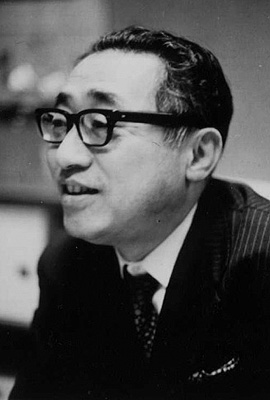
Hikaru Hayashi, Yoshiro Irino.
Source: Exton CD (My rip)
Format: mp3(320), DDD Stereo
File Size: 167 MB (incl. cover)
Download Link (mp3) – https://mega.nz/#!bb5CxagS!Ji4TkyzHc28guTcwczeczuYZXG3vnqhTNKIDoCJRb7I
Enjoy! Don’t share! Buy the original! Click on "Reputation" button if you downloaded this album! 🙂
Modern: Tonal/Contemporary
Michio Mamiya (間 宮 芳 生 *1929) is a Japanese composer. He studied with Moroi Saburo from 1940. He was a piano student of
Hiroshi Tamura of Tomojirō Ikenouchi in composition at the Tokyo National University of Fine Arts and Music. He is particularly interested in
"native" Japanese music. Nevertheless, his works display a synthesis of European music and traditional Japanese music. He has also dabbled
extensively in the traditional music of African tribes, Scandinavia and numerous Asian countries. As a speaker and lecturer, he worked
at workshops and so-called "clinics" in Finland, the former Soviet Union, Canada, the United States of America, Hungary and China.
Akira Ifukube’s Tryptique aborig???ne is entirely characteristic of his fusion of stylistic elements and harmony derived
from Stravinsky with traditional Japanese "dance" forms. The language is rhythmically charged, direct, almost "primitive". In contrast
to Hikaru Hayashi’s early Symphony in G [see above], his later Variations are much more harmonically advanced,
and display sharp, almost abrupt dynamic and atmospheric contrasts.
Music by [see above]
Played by the NHK Symphony Orchestra
With Hiroshi Tamura (piano)
Conducted by Niklaus Aeschbacher


Michio Mamiya, Akira Ifukube (and wife, 1941).
Source: Naxos NHK Archive CD (My rip)
Format: mp3(320), ADD Mono
File Size: 121 MB (incl. cover)
Download Link (mp3) – https://mega.nz/#!2SxgVQKR!KktaO-5qvq3F5g6SHpP0nv9xeNwKIyP50TiwJdXAsXQ
/>
Enjoy! Don’t share! Buy the original! Click on "Reputation" button if you downloaded this album! 🙂
Modern: Tonal
One of only a handful of Swedish composers whose music is heard with any regularity outside of Scandinavia,
Bo Linde’s life was cut tragically short by his 1970 suicide at the age of 37. Before that date, however, he
produced an abundance of music, in particular a wealth of orchestral literature. This Swedish Society disc is the Vol.3
[the first of which was released on Naxos label – you can find it in the "Concertos" thread] of a survey of Linde’s orchestral
works. The highlights of this disc are the First and Second symphonies. The First Symphony is frustratingly referred
to interchangeably as Symphony One, Sinfonia One, and Sinfonia Fantasia. Regardless of its title, it’s a rather
remarkable work given the composer’s young age at the time. The similarities with Britten and Shostakovich are quite clear,
though neither the First symphony, nor the Second Symphony (written more than 10 years later) have the same
edginess as either of these influential composers. Linde’s orchestration is quite sophisticated and effortless, and the dialogue
he achieves within the orchestra is engaging.
Music Composed by Bo Linde
Played by the G???vle Symphony Orchestra
Conducted by Petter Sundkvist
Source: Swedish Society CD (My rip)
Format: mp3(320), DDD Stereo
File Size: 137 MB (incl. covers & booklet)
Download Link (mp3) – https://mega.nz/#!KXYzTa6Y!ACsaWC_MGPpve-jp8jXnxRpvXpwzofMk8s05qy6RrSU
/>
Enjoy! Don’t share! Buy the original! Click on "Reputation" button if you downloaded this album! 🙂
———- Post added at 12:26 PM ———- Previous post was at 12:02 PM ———-
No.1460
Modern: Tonal
Ilkka Kuusisto (*1933) is a Finnish composer, conductor, and administrator, son of organist and composer
Taneli Kuusisto. He studied organ at the Sibelius Academy in Helsinki, and composition with Arre Merikanto
and Nils-Eric Fougstedt. In 1958 he went to New York to study organ with Seth Bingham, and completed
his studies in Germany and Vienna. Returning to Helsinki, Kuusisto served as conductor at the City Theater (1965-1968;
1971-1975) and in-betweem was head of the KIemetti Institute from 1969 to 1971. After serving as artistic director
of Fazer Music from 1981 to 1984, he was general manager of the Finnish National Opera from 1984 to 1992.
The First Symphony of 1998, dedicated to Osmo V???nsk??? and written for the Lahti orchestra, was, in the
composer???s words, composed ???in a state of summer enchantment.??? The sounds of the summer forest are inescapable;
in some ways, this is a Finnish answer to Wagner???s Forest Murmurs . There is a massive, legato melody just before four
minutes in that speaks of the core of Romanticism, beautifully rendered by the Lahti players. Another forest provides
the setting for the second movement; this time, we hear a march in Sherwood Forest (the material is derived from
the composer???s 1985 ballet Robin Hood ). There is an easy fluency to Kuusisto???s expression, the whole underscored
by an awareness of the beauty of sound itself.
The Concerto Improvvisando of 2006 for violin and small orchestra was written for the composer???s son, Pekka
(who is the soloist on the present recording). The emancipation of the improvisational instinct is key here, for it is
not only in the cadenza when the soloist???s fancy may roam. The free sections have chord indications to form a basis
for the improvisations. The result is a fascinating mosaic of the notated and the free, which merge impreceptively.
The first movement, Andante e rubato, has folk music at its heart, while the central Slow and Sweet is a delightful
example of slow swing that even finds the soloist whistling nonchalantly at one stage. The Latin American tinge to
the finale does not bring with it unfettered joy, however.
The cantata Kun talo alkaa soida (When the House Begins to Resound, 1992) has an interesting history:
Kuusisto was the last chief executive of the old opera house in Helsinki. Walter Gr???nroos, Kuusisto???s successor,
was a Swedish speaker and not confident enough to read out a speech in Finnish, so Kuusisto set it to music for
him to sing. The text is quite magpie-like (taking from the Bible, Schopenhauer, and the Kalevala ). There seems
to something Bart???kian about the vocal declamation, as well as the harmonies used.
Music Composed by Ilkka Kuusisto
Played by the Lahti Symphony Orchestra
With Pekka Kuusisto (violin)
Conducted by Jaakko Kuusisto
Source: BIS Records CD (My rip)
Format: mp3(320), DDD Stereo
File Size: 177 MB (incl. covers & booklet)
Download Link (mp3) – https://mega.nz/#!PTojnaAJ!O0Be2wkKHJqVC6vj-2qkYCI_hGPTyewA3CbFT0t6ELU
/>
Enjoy! Don’t share! Buy the original! Click on "Reputation" button if you downloaded this album! 🙂
Late Romantic
Carl Natanael Rexroth-Berg (1879-1957) was a Swedish composer. Berg trained in veterinary medicine and
began learning music by teaching himself. He later studied at the Stockholm Conservatory as the pupil of Johan Lindegren.
Until 1939, he served as a veterinarian in the Swedish Army and afterwards he became a freelance composer.
His output included five operas, three ballets, five symphonies as well as several symphonic poems, a piano concerto,
a violin concerto, a serenade for violin and orchestra, a piano quintet, ballades, lieder, and pieces for piano.
Berg’s music is again an example of music which is on a verge of romantic music, this time the music is rather
impressionistic in colors. The Piano Concerto, however, must be considered a full blown romantic concerto.
A beautiful, well crafted piece of romantic piano writing. The orchestral works are not far from Delius in style.
Music Composed by Natanael Berg
Played by the Royal Stockholm Philharmonic & Swedish Radio Symphony Orchestras
With Jacob Moscowicz (piano)
Conducted by Per Borin, Stig Westerberg & G???ran W. Nilson
Source: Sterling Records CD (My rip)
Format: mp3(320), ADD/DDD Stereo
File Size: 191 MB (incl. covers)
Download Link (mp3) – https://mega.nz/#!SaxwEagT!xnIvyLw6lgPYVtNSdVMdOLUBKHM48hU27MlPefpfR3o
Enjoy! Don’t share! Buy the original! Click on "Reputation" button if you downloaded this album! 🙂
Modern: Contemporary
Takashi Yoshimatsu (吉松 隆 *1953) is a contemporary Japanese composer of classical music. He is well known for composing
the 2003 remake of "Astro Boy." Yoshimatsu was born in Tokyo, Japan, and like Toru Takemitsu, the composer generally considered to
be Japan’s greatest in the western classical style, did not receive formal musical training while growing up. He dropped out of Keio
University in March 1974, and joined an amateur band named NOA as a keyboard player, emulating the music of Pink Floyd.
He became interested in the jazz and progressive rock scenes, particularly in the possibilities being explored through electronic
music. Since then he composed a number of pieces before making his name with the serialist Threnody for Toki in 1981.
The majority of his work is triadic and contains simple, repeated progressions, or in some cases pandiatonicism. Often extended
tertian harmonies are followed by whole tone harmonies.
Yoshimatsu has always been fascinated by birds and birdsong (much like Olivier Messiaen).
This is a collection of his bird-related works.
Music Composed by Takashi Yoshimatsu
Played by [see back cover & ID3 tags]
Conducted by Michiyoshi Inoue, Naoto Othomo & Yuzo Toyama
Source: Camerata Records CD (My rip)
Format: mp3(320), DDD Stereo
File Size: 275 MB (incl. covers)
Download Link (mp3) – https://mega.nz/#!2X42nQDZ!lsKNiC-eZ5y8zXbyHhrhWXCc9O8J15BYhTqsgp3MNbs
/>
Enjoy! Don’t share! Buy the original! Click on "Reputation" button if you downloaded this album! 🙂
Modern: Neo-Classical/Light Music
Kalervo Tuukkanen (1909???1979) was a Finnish composer. He was born in Mikkeli and died in Helsinki.
In 1948 he won a silver medal in the art competitions of the Olympic Games for his Karhunpyynti ("Bear Hunt").
Commenting on his career, Tuukkanen said: "I would consider that my career has been the fairly typical struggle of a
Finnish artist starting from humble beginnings. I have wasted time and effort to make a living in jobs that had little if
anything to do with my artistic or professional satisfaction; and their insecurity often pushed me to the limit, both
physically and psychologically."
This is a collection of his early, light-hearted orchestral works – all of them in a safely tonal, neo-classical idiom.
Music Composed by Kalervo Tuukkanen
Played by the Joensuu City Orchestra
Conducted by Hannu Koivula
"The Finnish company Alba have a splendid and flourishing catalogue that tends to get the cold shoulder outside Finland.
In fact their Tubin and Madetoja series merit serious attention. Here the company turns its attention to the romantic-
melodic music of Kalervo Tuukanen. The style is light Sibelian, tuneful and sincere. The string writing marks out long
singing lines and the woodwind chortles and chuckles gleefully. Heavy-booted folk dances can be heard as for example
in the Moderato of the Serenata. A sleepy repose settles over the Andantino con moto which could here have done with
more moto and less andantino from Koivola. The Allegro con fuoco chatters along in playfully Karelian spirits as does the
freestanding Midsummer Dance. Evening Song harks back to the warm bath of string sound in the Serenata’s andantino.
A quick approximation of Tuukkanen in playful mood is the Wir???n Serenade for strings. The music has a similar bounce.
The Little Suite has a gentle wan poetry typical of Rakastava but sometimes with a misty Gallic touch as in the works of
Uuno Klami especially in the impressionistic har of his Sea Pictures. Romantic Moments has two long, slow, faintly
melancholic movements framing a sparkling Wir???n-like Scherzino. After these works the quasi-Shostakovich tension
at the start of Tempus Festum comes as a slight jolt but Tuukkanen soon returns to the sort of writing Madetoja was
penning in his Second Symphony in 1915.
This is light music but not in the Coates or Ket???lbey sense. The music evinces a tasteful sensibility with leanings
towards national-impressionism and emotional fluency. Madetoja and Klami are reference points."
Musicweb
Source: Alba Records CD (My rip)
Format: mp3(320), DDD Stereo
File Size: 151 MB (incl. covers & booklet)
Download Link (mp3) – https://mega.nz/#!6KwxFYSQ!FfjAR4iMjOfSIHARV4_VUgepCMW90noMdeCOaspn3rM
Enjoy! Don’t share! Buy the original! Click on "Reputation" button if you downloaded this album! 🙂
Modern: Tonal/Contemporary
Another collection of shorter orchestral works by living composers, ranging
from neo-romantic to contemporary styles. Many would pass for film music
any day. 😉
Music by [see back cover & ID3 tags]
Played by the Brno Philharmonic Orchestra
Conducted by Mikel Toms
Source: Ablaze Records CD (My rip)
Format: mp3(320), DDD Stereo
File Size: 349 MB (incl. covers & booklet)
Download Link (mp3) – https://mega.nz/#!uPJHVAAK!ra1cHlGnw5Zq4aPMH8MDKLilWs2jVngIT60pWd13spA
Enjoy! Don’t share! Buy the original! Click on "Reputation" button if you downloaded this album! 🙂
Modern: Neo-Classical/Americana
American composer and conductor Robert Ward (1917-2013) is best known for his 1962 Pulitzer-prize-winning
opera, The Crucible, based on the Arthur Miller play about the seventeenth century witch trials in Salem, Massachusetts.
Ward also wrote seven other operas, seven symphonies, four concertos, and numerous shorter works. He became chancellor
of the North Carolina School of the Arts and later became a professor at Duke University, a position from which he retired
in 1987. Ward began his musical studies at the Eastman School of Music in Rochester, New York. After serving as an army
band director during World War II, he graduated from, and received a teaching position at, The Juilliard School. Later, he
studied composition with Aaron Copland at the Berkshire Music Center (now Tanglewood Music Center) in Massachusetts.
Even as a student, Ward had no trouble getting performances for his compositions. By the time he and a Juilliard colleague
wrote their first opera, Ward was already well known for his orchestral works. His opera Pantaloon (1955, retitled He Who
Gets Slapped in 1959) was well received and led to a commission from New York City Opera for The Crucible (1961),
the work on which his reputation is almost entirely based. None of his later operas was able to replicate that success.
Robert Ward is one of the last of a great generation of American composers whose music is full of patriotic high
spirits and optimism, with equal measures of warmth and heartfelt melody. Ward’s style of composition derives largely
from German composer Paul Hindemith but also reflects the considerable influence of American composer George Gershwin.
Music Composed by Robert Ward
Played by the Iceland Symphony & The Triangle Chamber Orchestras
And the Czech Philharmonic Chamber Orchestra
Conducted by Igor Buketoff, Lorenzo Muti & Alan Balter
Source: Albany Records CD (My rip)
Format: mp3(320), ADD Stereo
File Size: 196 MB (incl. covers & booklet)
Download Link (mp3) – https://mega.nz/#!GCIniKBQ!lN7Wq8zkinWflxujG0O15JCav-SIe26Rta4sYgMs0No
/>
Enjoy! Don’t share! Buy the original! Click on "Reputation" button if you downloaded this album! 🙂
a heads up: the Orchestral Masters, Vol. 2 album has a defect. In the Farrugia piece, Capriccio Mediterraneo, after 7:20, there is heavy damage to the CD. You can probbly know whether that is a pressing error or a grain the disc at the time of recording. It is a very enjoyable compilation CD overall.
Modern: Tonal
Kazuo Yamada (山田 一雄 1912-1991) was a Japanese conductor and composer. Born in Tokyo
in 1912. Began studies at Gakushuin and then Tokyo University of the Arts (formerly the Tokyo Music School).
Studied piano with Leo Sirota and Paul Weingarten, and composition with Klaus Pringsheim, and graduated at
the top of his class. Formed the orchestra ‘Prometh???e’ as a composer. In 1937 was awarded first prize from
the Japan Broadcasting Corporation for his symphonic music works, and in 1938 was also awarded by the
New Symphony Orchestra. Appointed to the post of chief conductor of the Japan Symphony Orchestra which
was reorganized from the New Symphony Orchestra (which is now the NHK symphony orchestra) in 1942,
greatly contributing to the improvement of the orchestra for the next 13 years.
Music Composed by Kazuo Yamada
Played by the Orchestra Nipponica
With Etsuko Yamada (soprano)
Conducted by Yoshikazu Tanaka
Source: Exton CD (My rip)
Format: mp3(320), DDD Stereo
File Size: 181 MB (incl. cover)
Download Link (mp3) – https://mega.nz/#!jHAz1QLQ!yn2w3lfmbYXCo8PWOvTBXnDPjRf_S8OsIaV6QcwaVOQ
Enjoy! Don’t share! Buy the original! Click on "Reputation" button if you downloaded this album! 🙂
Modern: Tonal
Stephen Paulus (1949-2014) was best known for his 1982 opera The Postman Always Rings Twice and his hit choral
piece The Road Home (2002). With ten operas in his output and more than 150 choral works, a fair portion of which are
devoted to sacred music, Paulus probably made his greatest impact in these vocal genres, though he also wrote over 50 works for
orchestra, including several critically acclaimed concertos, program pieces, suites, and various other orchestral compositions,
many involving a vocal soloist. Raised in Minnesota from age two, he studied piano in his youth and later on earned a doctorate
degree in composition at the University of Minnesota, where his teachers included Dominick Argento. Pauluis died in 2014 after
spending a year in a coma.
Music Composed by Stephen Paulus
Played by the Boston Modern Orchestra Project
With Janet Bookspan (narrator)
Conducted by Gil Rose
Source: Arsis CD (My rip)
Format: mp3(320), DDD Stereo
File Size: 148 MB (incl. covers)
Download Link (mp3) – https://mega.nz/#!rTxwhA6Y!bZKLpiTfr4nwNa4apDpqhxj0cSkfppNhImmki1xFtNs
Enjoy! Don’t share! Buy the original! Click on "Reputation" button if you downloaded this album! 🙂
Modern: Tonal
American composer, conductor and educator, Lukas Foss (1922-2009), has contributed profoundly to the circulation and
appreciation of music from the 20th century. He began his musical studies in Berlin, where he studied piano and theory with
Julius Goldstein (Herford). Goldstein introduced Foss to the music of Bach, Mozart and Beethoven, which proved to have a
profound effect on Foss’s musical development. In 1933, Foss went to Paris, where he studied piano with Lazare Levy, as
well as composition with Noel Gallon, orchestration with Felix Wolfes and flute with Marcel Moyse. Foss began to compose
at the age of 15, and at the age of 22, won the New York Music Critic’s Award for his cantata, Prairie.
The compositions of Lukas Foss illustrate two main periods in his artistic development, separated by a transitional phase,
which is characterized by controlled improvisation. The works of the first period are predominantly neo-classic and eclectic
in style, which he infused with elements of American popularism. The transitional period began in 1956 when he began to
formulate what he referred to as "system and chance music" for his work with the Improvisation Chamber Ensemble.
This led to an abandonment of tonality and the classical fixed forms in favor of serialism, indeterminacy and graphic
notation.
Music Composed by Lukas Foss
Played by the Boston Modern Orchestra Project
Conducted by Gil Rose
"As on so many occasions in the past, listeners should be grateful to Gil Rose for both identifying a gap in the catalogue
and filling it so well with these readings with his Boston players. The dates of the recording sessions seem extraordinary ???
two days to set down three of the symphonies, totalling nearly two hours of music! ??? but there is very little evidence of
under-rehearsal. In the second movement of the Fourth Symphony Foss???s request for an optional accordion part is for
some reason replaced with a harmonica (the mouth-organ type, not the glass version) which seems odd ??? there are
plenty of capable accordion players around, and the part doesn???t seem difficult ??? but it works well enough in the capable
hands of Ralph Rosen. And the symphonies themselves, when heard in chronological order, make a fascinating traversal
of Foss???s career. Even though the Third contains a certain measure of dead wood, the First is a charming symphony in
the American mould, and the Second and Fourth both have sections of real substance. The recordings, as always from
this source, are excellently balanced and clear. This set should do much to restore Foss???s reputation as a major
composer with his own distinct compositional voice; he clearly worked well within the constraints of symphonic form."
Musicweb
Source: BMOP/sound CD (My rip)
Format: mp3(320), DDD Stereo
File Size: 355 MB (incl. covers)
Download Link (mp3) – https://mega.nz/#!PfoVgCZR!P3TtfuP_Ddwl5PN8jA20FRmTeaESsBpBi8ExCvYrMLI
Enjoy! Don’t share! Buy the original! Click on "Reputation" button if you downloaded this album! 🙂
Modern: Tonal
Ann Millikan’s (*1955) music has been described as "tonally challenging yet emotionally involving" (Joseph Woodard,
LA Times), "packed with propellant polyrhythmic textures" (New Sounds, WNYC), and "characterized by high energy and a
quirky inventiveness that defies easy categorization…Her scoring is clean and transparent and her felicities of orchestration
are among the most attractive elements in her work." (Stephen Eddins, All Music).Millikan composes concert music for orchestra,
chamber ensembles and choir, opera, experimental and interdisciplinary projects involving installation, theatre and dance.
Rhythmic vitality is a powerful force in her music, stemming from previous years playing jazz, African and Brazilian music.
Her music is expressive and colorful, moving freely between atonal and tonal/modal languages depending upon the overall
desired effect. She creates rich orchestral textures that are characterized by layering, rhythmic juxtaposition, and complex
counterpoint.
Millikan Symphony is a 47-minute work for full orchestra written in four movements, each honoring an area of
Robert Millikan’s work and accomplishment: Science, Animals, Rowing, Violin. "My intention with this composition was not
to simply write a piece for the orchestra to play, but to compose a work in collaboration with the UNC/regional community."
Dr. Robert Millikan was the Barbara S. Hulka Distinguished Professor of Cancer Epidemiology at UNC-Chapel Hill.
Music Composed by Ann Millikan
Played by the Boston Modern Orchestra Project
With Jennifer Curtis (violin)
Conducted by Gil Rose
"The background to the Millikan Symphony is a deeply personal one. Composer Ann Millikan???s brother Robert became
a brilliant scientist whose groundbreaking work on breast cancer has had a wide impact, his innovations in this field
paralleled by enthusiasms for rowing, music and the violin. As children, Robert and his sister filled notebooks with
musical sketches, including for their magnum opus, ???Millikan???s Symphony???, and when he died at the age of 55 it was
inevitable that Ann would feel the call to complete the concept that they had shared all those years ago.
The four movements cover Robert Millikan???s life and work, starting with Science, a musical representation of the
???multistage carcinogenesis process at the molecular level, in particular the interaction between oncogenes and tumour
suppressor genes.??? This troubling subject matter is reflected in restless, often threatening music in which a battle is
fought between cancerous and non-cancerous cells, percussion adding military violence to a field of war in which
suspense has been built up through atmospheric strings and winds and brass that argue with each other with
increasing vigour.
Robert, or Bob Millikan was not only a lover of nature, but also worked as a veterinarian. The movement Animals
brings us into a serene countryside landscape, with lyrical melodic shapes and the sounds of nature introduced through
instrumental solos. Personal touches include an Irish tune to symbolise time spent there as a Fulbright scholar, and a
quote from Mendelssohn???s Violin Concerto speaking for Bob???s violin. Nature is not all ease and beauty of course, and
there is a nocturnal feel to the later minutes of this movement that has a darker edge, and some heartbreaking
mourning from a solo cello.
Rowing is the scherzo of this symphony, opening with a call for the race to start, the action of rowers and the movement
of water set in motion through an ostinato from marimba and vibraphone. The tempo is set to match that of an actual
race, so the rise in tension and final climactic sprint is a narrative that has its basis in the genuine dramas of extreme
physical competition.
The final movement, Violin, is a concerto in its own right, its thematic framework using a theme that comes straight
from that youthful ???Millikan???s Symphony???. Violinist Jennifer Curtis played a significant role in gathering material for this
work, including a study of Bob???s detailed written notes on his collection of scores as clues to his approach to playing
the violin. There is an element of the Romantic in the nature of this movement, though the character of the music also
reflects the troubling restlessness of the opening to this symphony, the battle of cells now the stresses of a man dealing
with the demanding and technical nature of his chosen instrument, as well as the delight in being able to express oneself
in music through its sublime sound. Music itself triumphs by the close: a ruminative central section finally being taken
over by an exuberant dance in 7/4 time over which the violinist soars with ecstatic virtuosity.
Well known through its own BMOP label, the Boston Modern Orchestra Project is the ideal band for this kind of recording,
responding superbly to the widely contrasting nature of this extensive work. Such a personal piece defies criticism but,
other than a possible question of proportional balance with the extensive nature of the ???concerto??? finale, it is an easy
work to appreciate for its well-crafted and ever interesting motion through the life of a much-loved individual."
Musicweb
Source: Innova CD (My rip)
Format: mp3(320), DDD Stereo
File Size: 117 MB (incl. covers & booklet)
Download Link (mp3) – https://mega.nz/#!aPACxIKA!W-BmRz-MhNvDrepNGeDMX40WBZo8JmduV2ex5GQYE-E
/>
Enjoy! Don’t share! Buy the original! Click on "Reputation" button if you downloaded this album! 🙂
Modern: Tonal
Scott Wheeler is an American concert-music composer, born February 24, 1952, in Washington, D.C., now based in
Boston, Massachusetts. Since 1989, he has been on the faculty of Emerson College in Boston, where he has co-directed the
music theater program. Wheeler co-founded (with Rodney Lister and Ezra Sims) and for many years was artistic director of
the Dinosaur Annex Music Ensemble, of which he remains artistic adviser. As an active conductor and an advocate for the
music of his colleagues, he has led numerous world and local premieres and recorded several compact discs. Wheeler is
on the board of directors of the Virgil Thomson Foundation, a composer advocacy group. He attended Amherst College,
the New England Conservatory, and Brandeis University and counts Virgil Thomson among his teachers.
Wheeler is best known as the composer of vocal and theater music. In February 2006, he was one of several composers
selected as part of the Metropolitan Opera/Lincoln Center Theater commissioning project for a new operatic work. Wheeler
has written music in most concert genres from solo pieces to orchestral. In fact, Wheeler turns out to be a highly effective
composer of classical music by virtue of a vivid aural imagination whose ingenious, garrulous products he crafts into
absorbing symphonic soundscapes.
Music Composed by Scott Wheeler
Played by the Boston Modern Orchestra Project
Conducted by Gil Rose
"The program opens with Crazy Weather (2004) for double string orchestra. The piece opens with a rush of energy,
and its bright, brittle writing reminds me of a work I love, Charles Wuorinen’s Grand Bamboula. Even when the music
opens into slower or more expansive realms, it always projects a sense of being taut and wrought. City of Shadows (2007)
is a single-movement work whose sections that suggest a mini-symphony. It’s distinguished by its sense of multiple
time-worlds coexisting, as in the brass chorales combined with skittering strings in the opening, or the following plaintive
string lines against delicate percussive clicks. This work has the most evidently "new English" sound of the program –
I realize it’s a fun, albeit inadvertent, as of course it references Wheeler’s home region, but I also mean that I hear
gestures and harmonies that remind me of Maxwell Davies and his school. But the piece has a surging, relentless
energy that frankly is quite American, and does sound the least bit derivative. And the way its storm clears for the
last three minutes, leaving a vast space filled with delicate and disparate sounds, is magical.
The concluding work, Northern Lights (1987) is the earliest on the program — and it’s definitely the work of a younger
man, brimming with a certain jazzy swagger. The first movement, with its repeated cymbal riffs, even suggests a whiff
of Bernstein. The second movement grows more pensive and dark, opening with a "trilogue" between that insistent
cymbal, orchestral hammer-strokes, and keening lines. This in turn finally erupts into more intensity and ecstasy, with
harmonies and gestures that owe a bit to John Adams. The third movement seizes this line without pause, and pushes
to a conclusion in music that is simultaneously breathless and surging, and also expansive (an apt description of Sibelius’s
music, and influence the composer acknowledges and a connection to the work’s title).
This is music packed with ideas, yet it remains clear, and its transparent scoring allows different levels of activity to
coexist and reinforce one another healthily. Wheeler shows that his dramatic instincts can successfully guide more
"abstract" forms. he’s a composer who takes every note seriously, but never loses his sense of play. The result is a
bracing ride, delivering thrills and pleasures."
American Record Guide
Source: BMOP/sound CD (My rip)
Format: mp3(320), DDD Stereo
File Size: 131 MB (incl. covers)
Download Link (mp3) – https://mega.nz/#!TSZ1WaKI!qdBi4K6KTEFBKFE5N-uhEUu61vHixv34tjShkIc9JCU
/>
Enjoy! Don’t share! Buy the original! Click on "Reputation" button if you downloaded this album! 🙂
Modern: Americana
Perhaps best known for his collaborations with author Gertrude Stein, American composer and music critic
Virgil Thomson (1896-1989) was born in Kansas City. He began playing piano at the age of five and began
taking lessons with local teachers at age 12. He studied organ from 1909 until 1917, and again in 1919. As a young
man, Thomson worked as an organist in his family’s church of Calvary Baptist, as well as in other churches throughout
Kansas City. After attending Central High School from 1908 to 1913, Thomson enrolled at a local junior college, where
he studied from 1915 to 1917, and again in 1919. During World War I, Thomson enrolled in the Army, where he served
in a field artillery unit. He also received training in radio telephony at Columbia University and in aviation in Texas.
The war ended shortly before Thomson was to leave for France.
In the fall of 1919, Thomson enrolled at Harvard University, where he met three individuals who would come to have
a profound influence on the young musician. The first of these was Edward Burlingame Hill, with whom Thomson studied
orchestration and modern French music. Archibald T. Davison was the conductor of the Harvard Glee Club, a group with
which Thomson spent three years as assistant and accompanist. Thomson also came into contact with S. Foster Damon,
a Blake Scholar who introduced him to the music of Satie and the writings of Gertrude Stein. Thomson began to compose
in 1920, while still a student at Harvard.
Thomson spent the summer of 1921 touring Europe with the Glee Club. As the tour wound down, Thomson decided to
remain, and under a John Knowles Paine Traveling Fellowship, he studied organ with Nadia Boulanger and counterpoint
privately. During this time, he continued to compose and had his first critical writings published by the Boston Transcript.
Upon his return the U.S., Thomson returned to Harvard and became organist/choirmaster at King’s Chapel in Boston.
After his graduation from Harvard in 1923, a grant from the Juilliard School allowed him to go to New York, where he
studied conducting with Chalmers Clifton and counterpoint with Rosario Scalero.
From 1925 to 1940, aside from occasional visits to the U.S., Thomson resided in Paris. It was there, in 1926, that he
met Stein. The two began to plan an opera, the result of which is Four Saints in Three Acts, perhaps Thomson’s most
famous work. For a period of approximately seven years after the composition of Four Saints in Three Acts, Thomson
explored the problems of "pure" music as he worked on expanding his technical facility as a composer, especially in
regards to writing for string instruments. During the late 1930s, Thomson returned to a more nationalistic vein with
the scores to two films, The Plow That Broke the Plain and The River, and a ballet, Filling Station.
In October of 1940, Thomson became music critic for The New York Herald Tribune. Although he continued to compose
during his 14 years at the post, Thomson established himself as one of the foremost critical writers of the era. His writings,
which are characterized by a brilliant and at times deeply provocative, but always highly opinionated whit, furnished
material for three anthologies; The Musical Scene, The Art of Judging Music and Music, and Right and Left. Throughout
the 1950s and 1960s, Thomson traveled extensively as a guest lecturer, or a conference participant, all the while
continuing to conduct, write articles, and compose.
Music Composed by Virgil Thomson
Played by the Boston Modern Orchestra Project
With Thomas Meglioranza (baritone) & Kristen Watson (soprano)
Conducted by Gil Rose
"This new release opens with a pair of orchestra pieces from 1961-62. A Solemn Music (in a wind ensemble version)
is a classic of the band world. A Joyful Fugue is almost completely unknown but it is a real delight, and this diptych is
one of Thomson???s most satisfying brief orchestral works. The largest piece on the CD is Thomson???s only unrecorded major
orchestral piece, the symphonic suite Three Pictures for Orchestra. Written as separate commissions from 1947 to 1952,
each depicts a scene: ???The Seine at Night,??? ???Wheat Field at Noon,??? and ???Sea Piece with Birds.??? The music uses Thomson???s
more romantic (and often more dissonant) idiom, reminiscent of the music of his last opera, Lord Byron. ???Sea Piece
with Birds??? is a particularly vivid (and dissonant) depiction.
Thomson was one of the great masters of English prosody, and his book Words and Music (1982) still remains the only
text ever written on the subject of making musical settings of English poetry and prose. The inner tracks of this release
are three vocal works, the first of which is perhaps my favorite small-scale work of Thomson???s: The Feast of Love (1964)
for baritone and chamber orchestra, a setting of Thomson???s own English translation of an anonymous second- or
fourth-century Latin manuscript. It is a vibrant pagan paean to love and spring, and Thomson???s setting is true perfection.
The Feast of Love and the Blake songs are performed exquisitely by baritone Thomas Meglioranza, who is a committed
advocate for contemporary music. The last recording of this work was an unbelievably turgid rendition by Patrick Mason
on the Bridge label a few years ago, so this new version (almost two full minutes faster) is very welcome and allows the
work to be heard as it should be. (A much older recording by Donald Clatworthy and the Eastman-Rochester Orchestra
under Howard Hanson is also available on Mercury.)
In its piano version, Five Songs from William Blake is one of Thomson???s more frequently performed works; it is particularly
nice to hear the witty and colorful orchestration. Though all are appealing, the final song deserves special mention. It is a
setting of ???And Did Those Feet,??? the famous extract from Blake???s poem ???Milton??? that is best known in C. Hubert H. Parry???s
soaring hymn Jerusalem. Thomson???s gorgeous treatment is the polar opposite of Parry???s beloved Edwardian pomposity,
setting the text instead with the delightful atmosphere of British Isles folk music. It provides one of those brain-tickling,
cognitive dissonance moments when something so familiar is experienced in a totally fresh way. Meglioranza is ably
joined by Kristen Watson in Collected Poems, a humorous treatment of a text by Kenneth Koch, a series of satirical
one-line poems."
Fanfare
Source: BMOP/sound CD (My rip)
Format: mp3(320), DDD Stereo
File Size: 142 MB (incl. covers)
Download Link (mp3) – https://mega.nz/#!ueYzWIQD!dI2p7gP-DCDAVLD6ciA_-b3THuPut5MF4AGkXFJ9hE4
/>
Enjoy! Don’t share! Buy the original! Click on "Reputation" button if you downloaded this album! 🙂
Modern: Tonal
William Schuman’s (1910-1992) 60-year career as a composer and an educator left an indelible mark on several
generations of American musicians. Schuman began exploring jazz and popular music while attending public school, eventually
forming an ensemble of his own (in which he played violin and banjo). Abandoning a career in commerce, Schuman enrolled
in the Juilliard Summer School, and, in 1933, entered Columbia University’s Teacher’s College, eventually taking his bachelor’s
and master’s degrees. After summer study at the Salzburg Mozarteum in 1935 and the completion of his First Symphony in
1936 (a work subsequently withdrawn by the composer) he received private instruction from well-known American
composer Roy Harris. Between 1938 and 1945 Schuman served as director of publications for G. Schirmer, Inc. as well
as on the faculty of Sarah Lawrence College, leaving this post to take over as president of the Juilliard School (where he
remained until 1961, initiating a wide range of new projects and policies, including the complete reorganization of the
theory/composition program and the creation of the Juilliard String Quartet).
It’s new music for a new year, as we are releasing the world premiere recording of The Witch of Endor by
William Schuman. This latest release on BMOP/sound includes three of Schuman’s collaborations with dancer and
choreographer Martha Graham, with Judith, Choreographic Poem and Night Journey rounding out the disc.
Start your new year right with this not-to-be-missed disc!
Music Composed by William Schuman
Played by the Boston Modern Orchestra Project
Conducted by Gil Rose
Source: BMOP/sound CD (My rip)
Format: mp3(320), DDD Stereo
File Size: 189 MB (incl. cover)
Download Link (mp3) – https://mega.nz/#!iO5HRQaS!TqXXptZWMmU_Pw8dajwVjzWOs9Mua9aqfca8X6YLp5U
Enjoy! Don’t share! Buy the original! Click on "Reputation" button if you downloaded this album! 🙂
Modern: Tonal
Like Gunther Schuller, his senior colleague at the New England Conservatory and formerly one of his professors at Yale,
William Thomas McKinley (1938-2015) played, taught and composed classical as well as popular music. His popular
specialty was jazz, which he studied alongside the masters as a child. By age 12, he was already a member of the American
Federation of Musicians. For two years, he was house pianist at a Pittsburgh restaurant. Then, as he told an interviewer,
"I heard Bart???k’s Concerto for Orchestra when I was about 17 [Fritz Reiner’s performance] and said to myself, I can do that."
A year later, he enrolled at Carnegie-Mellon University, where he studied piano with Frederick Dorian and composition with
Nikolai Lopatnikoff. He said that after his studies "I stopped writing music I didn’t like. I don’t know what made me turn back
to myself, to the American pop tunes I grew up with, the jazz — late swing, bebop, cool, modern — and the whole Classical-
Romantic background of Tchaikovsky and Brahms that I really love. I think I’m the only American who has this totally blended
background. I let it all come together, eliminating pretensions, all complexity, everything superficial…filtering out everything
I thought was dishonest. This is to me the prototype of a pure American music." In the decades after, he composed well over
200 works in all forms including symphonies, concertos, and chamber music.
The Marimba Concerto, "Childhood Memories," was written in 2005 for Nancy Zeltsman; it is in 14 movements,
each with a title like ???Daydreams,??? ???Under the Sprinkler,??? and ???Morning Light.??? The orchestration is brilliant and full, and the
music never loses momentum; it starts with an artificial sounding fade-in, and we???re immediately plunged into the middle of
the conversation.
R.A.P. has nothing to do with rap music, so don???t panic; it stands for rhythm and pulse, and is a concerto for small
jazz combo (clarinet, piano, bass, and drums) and big band. It is indebted to Stravinsky???s Ebony Concerto, according
to McKinley, but much of it is taken straight from the Michael Torke composing textbook???lively, spastic bursts of music.
R.A.P. is, incidentally, a multisectional work in which each section gets faster up to a point and then they start getting
slower down to a point and the structure forms an upside down.
The final work on the disc is 13 Dances for Orchestra, written specifically for Gil Rose and BMOP and without soloists,
focusing instead on collective virtuosity???much like a concerto for orchestra. The thirteen short movements draw upon a
variety of popular dance rhythms, each revitalized with fresh rhythmic combinations and syncopations.
Music Composed by William Thomas McKinley
Played by the Boston Modern Orchestra Project
With Nancy Zeltsman (marimba) & Richard Stoltzman (clarinet)
Conducted by Gil Rose
Source: BMOP/sound CD (My rip)
Format: mp3(320), DDD Stereo
File Size: 195 MB (incl. covers)
Download Link (mp3) – https://mega.nz/#!yawBQKIZ!5tNkQv4QuamJ1qaLKfKmBlkGrKZRr7XqHGDjFcwNsqU
Enjoy! Don’t share! Buy the original! Click on "Reputation" button if you downloaded this album! 🙂
Modern: Tonal
John Harris Harbison (*1938) is among the most prominent and prolific of American composers; his highly varied
and interesting output has earned him the moniker, "the great master of ambiguity." Harbison was born in Orange, NJ,
and grew up in Princeton. While a teenager he received musical guidance from Roger Sessions, one of his formative
influences, while also developing considerable skills as a jazz pianist. Other of Harbison’s teachers include Walter Piston
at Harvard, Boris Blacher at the Berlin Hochschule f???r Musik, and Earl Kim at Princeton. Exceptional economy and
expressive range mark Harbison’s music. His works embrace elements of jazz as well as the early and late Baroque
styles of Heinrich Sch???tz and J. S. Bach. At times, the harmonic palette brings to mind the sound of Prokofiev or the
rigorous serialism of 1950s Stravinsky. He is also a practiced writer on the art and craft of composition.
Thematically well thought out, and structured, Ulysses is based on the classic Greek mythology tale. A theme that
is obviously not in vogue, but, one that the composer creates some wonderful new music to accompany. A poignant and
personal look at Ulysses???s journey by John Harbison. As the composer indicates, it was conceived as a ballet score, but,
he is not sure it will ever be produced as a ballet. In fact it would be a challenge to choreograph some portions of the
music. But it certainly makes a complete and fulfilling musical program! It is very pleasing to the ear, a claim which
not all modern concert music can lay claim to. The piece tells the epic tale with a full range of colors using a complete
palette of sounds and emotions. Character development through the use the musical motives is very well presented.
It is full of nuance and subtlety, paired with dramatic, emphatic, and rousing moments to reflect the various events
in the tale. Well placed dramatic highlights and effects, punctuated with energy and victory are carried forward with
a motion that is appropriately paced. There are large sections were ballet movements would be very well served.
The sound is often bright and focused while using embellished instrumentation to represent the full gamut of emotions
need for the story. At times the intricate themes present the lonely and forlorn reflecting the characters place in the
journey. Like good story telling the music is varied in emotion, tone, pace and color. Overall it is lyrical, accessible
and very understandable.
Music Composed by John Harbison
Played by the Boston Modern Orchestra Project
Conducted by Gil Rose
"With rare exceptions, ballet scores are best left to the theater, unless extraneous material can be excised
and substantial excerpts forged into a concert suite (or two). Select ballets by Tchaikovsky, Stravinsky, Ravel
and only a handful of others who excelled in the genre deserve comprehensive treatment in the concert hall.
Harbison???s Ulysses- evidently not yet danced- is such a superb piece of narrative writing that it does more than
hold attention for its 80-minute span. Even without choreography or stage pictures, the score weaves an
intriguing tale through telling transformation of thematic devices and instrumental possibility.
One of the composer???s great gifts is his ability to take the listener inside the events of the Ulysses epic minus
the need for a specific scenario. The sequences unfold with splendid variety of material and color, sustaining
an emotional and dramatic arc from Act 1 (???Ulysses???s Raft???) through Act 2. As in many of his large works,
Harbison draws brilliantly upon the vast resources of the orchestra to conjure the whirlwind nature of the
protagonist???s adventures.
Rose and the Boston Modern Orchestra Project are expert champions of this neglected score. The playing is
detailed and sweeping, providing Harbison???s ballet with the intimacy and sonic splendor it needs to be
revealed as a compelling achievement."
Gramophone
Source: BMOP/sound CD (My rip)
Format: mp3(320), DDD Stereo
File Size: 193 MB (incl. cover & booklet)
Download Link (mp3) – https://mega.nz/#!eHp3AQia!omZqx5P8O6y-zo2_eVeiC_5JN0Y2Pmt3IcHksyUndq0
/>
Enjoy! Don’t share! Buy the original! Click on "Reputation" button if you downloaded this album! 🙂
thanks so much wimpel!

